Mission for Aatmanirbharta in Pulses (2025–31)
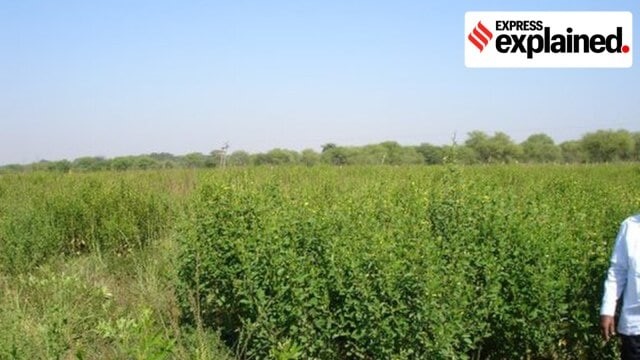
- 31 Oct 2025
In News:
- India, the world’s largest producer and consumer of pulses, continues to face a structural gap between domestic production and rising demand. Lower productivity levels, yield gaps, and increasing import dependence have highlighted the need for a targeted national strategy.
- To address these concerns, the Government of India has launched the Mission for Aatmanirbharta in Pulses (2025–31)—a six-year initiative aimed at transforming India into a self-reliant pulses-producing nation through scientific, institutional, and market reforms.
Overview of the Mission
Formally launched by the Prime Minister on 11 October 2025, the Mission for Aatmanirbharta in Pulses was first announced in the Union Budget 2024–25. The programme is implemented by the Ministry of Agriculture and Farmers’ Welfare, with collaborative support from NAFED, NCCF, and state governments.
Mission Duration and Financial Outlay
- Implementation period: 2025–26 to 2030–31
- Total outlay: ?11,440 crore
- Targets:
- Raise production by 45%—from 242 lakh MT (2023–24) to 350 lakh MT (2030–31)
- Expand cultivated area by 13%—from 275 lakh ha to 310 lakh ha
- Improve average yield by 28%—from 881 kg/ha to 1,130 kg/ha
Rationale: Current Status and Challenges
India cultivates a wide variety of pulses across agro-climatic zones. Major pulse-growing states include:
- Area (2023–24): Rajasthan (54.67 lakh ha), Madhya Pradesh (51 lakh ha), Maharashtra (44 lakh ha), Uttar Pradesh (30 lakh ha)
- Production (2023–24): Madhya Pradesh (59.74 lakh MT), Maharashtra (40 lakh MT), Rajasthan (33 lakh MT), Uttar Pradesh (31 lakh MT)
Gram dominates both area and output, followed by moong, tur (arhar), urad, and masoor. Over 60% of pulses production occurs during the rabi season.
Despite being the largest pulses producer, India remains dependent on imports from Myanmar, Tanzania, Mozambique, Canada, Australia, among others. Demand is projected to reach 268 lakh MT by 2030 and 293 lakh MT by 2047 (NITI Aayog), far exceeding current production levels. Productivity remains significantly lower than global benchmarks—Canada (2200 kg/ha) and China (1815 kg/ha).
Why Focus on Tur, Urad, and Masoor?
These three pulses account for 34% of total pulses area and contribute significantly to national output. They also exhibit high yield gaps and are crucial for nutritional security. The Mission plans:
- 9 lakh ha expansion in tur—across Karnataka, Maharashtra, Uttar Pradesh, Gujarat, Jharkhand and non-traditional areas like the Northeast.
- Utilisation of rice fallows for expanding urad in Uttar Pradesh, Andhra Pradesh, and Maharashtra.
- Promotion of masoor in rice fallow areas of West Bengal, Bihar, Chhattisgarh.
Key Components and Features of the Mission
1. Development of Climate-Resilient Seeds: Focus on high-yielding, drought-tolerant, pest-resistant, and protein-enriched varieties.
2. Higher Productivity through Technological Adoption
- Enhanced support of ?10,000/ha for Front Line Demonstrations (FLDs) of improved technologies (higher than ?9,000 under NFSM).
- Strengthening post-harvest storage, grading, and processing infrastructure.
3. 100% Assured Procurement
A major innovation in the mission framework:
- NAFED and NCCF will undertake 100% procurement of tur, urad and masoor for four years under PM-AASHA’s Price Support Scheme (PSS).
- Aadhaar-enabled biometric/facial authentication will ensure transparency and eliminate leakages.
4. Cluster-Based Approach
Each cluster will include minimum 10 ha (2 ha in hilly/Northeast region). Cluster selection based on:
- Four-fold district classification: HA-HY, HA-LY, LA-HY, LA-LY
- Rice fallow, rainfed, and watershed areas
- Aspirational districts, border/LWE districts
- Regions under PM Dhan-Dhaanya Krishi Yojana, Adarsh Gram Yojana, and Northeast/Himalayan areas
5. Value-Chain Strengthening: Interventions span input supply, extension, mechanisation, processing, market linkages and digital traceability.
Comparative Advantage over Previous Schemes
The Mission subsumes the pulses component of National Food Security and Nutrition Mission (NFSNM) but provides:
- Higher financial support
- Wider geographical coverage
- Expanded interventions (seed hubs, storage, procurement)
- Stronger digital governance
- Guaranteed procurement for three major pulses
National Significance
- Food and Nutritional Security: Pulses are key protein sources in Indian diets.
- Import Substitution: Reduces dependency on global markets and price volatility.
- Farmer Income Stability: Guaranteed procurement and improved yields boost profitability.
- Climate Resilience: Promotes drought-friendly crops, diversifies cropping patterns, and utilises rice fallows.
- Balanced Regional Development: Targets backward, rainfed, aspirational and border districts.
Electronics Components Manufacturing Scheme (ECMS)

- 31 Oct 2025
In News:
The Government of India has cleared the first batch of seven projects worth ?5,532 crore under the Electronics Components Manufacturing Scheme (ECMS), marking a critical milestone in India’s transition from assembling finished electronic products to building a strong component-level manufacturing base. These approved projects are expected to generate ?36,559 crore in production, create over 5,100 direct jobs, and significantly reduce India’s import dependence in high-value electronic components.
Overview of the ECMS
The Electronics Components Manufacturing Scheme (ECMS) is a flagship initiative under the Ministry of Electronics and Information Technology (MeitY). Approved by the Union Cabinet in 2024, its objective is to strengthen India’s backbone in the electronic components and materials ecosystem.
Key Objectives
- Promote domestic manufacturing of bare components, sub-assemblies, and specialized materials.
- Enhance domestic value addition (DVA) across the electronics supply chain.
- Integrate Indian manufacturers with Global Value Chains (GVCs), especially in semiconductors, telecom, EVs, and renewable energy.
- Support capital investments through a mix of turnover-linked, capex-based, and hybrid incentives.
Tenure and Incentive Structure
- Turnover-linked incentive: 6 years, with a 1-year gestation period.
- Capex incentive: 5-year support window.
Projects Approved Under the First Batch
The first set of projects includes manufacturing units for:
- High-Density Interconnect (HDI) PCBs
- Multi-Layer PCBs
- Copper Clad Laminates (CCL)
- Camera Modules
- Polypropylene Films
These units are spread across Tamil Nadu (5 units), Andhra Pradesh (1 unit), and Madhya Pradesh (1 unit), promoting regional dispersion of advanced electronics manufacturing.
Strategic Impact on Domestic Manufacturing
Meeting Domestic Demand
- New manufacturing units will meet 100% of India’s demand for Copper Clad Laminates.
- 20% of domestic PCB demand and 15% of camera module demand will be met locally.
- Around 60% of total production from these plants is expected to be exported, strengthening India’s global integration.
Camera modules, PCBs, and base materials form the essential components in smartphones, laptops, drones, robotics, medical devices, automotive electronics, and industrial systems — sectors critical for future economic growth.
India’s Strong Entry into Base Material Manufacturing
- A major breakthrough is the establishment of India’s first Copper Clad Laminate manufacturing unit, which serves as the foundational material for multi-layer PCBs. Previously, the entire requirement was imported, exposing India to supply chain vulnerabilities.
- Similarly, Polypropylene Films, vital for capacitor production used in consumer electronics, automotive components, telecommunications, computing equipment, and industrial systems, will now be manufactured domestically.
Economic and Industrial Impact
- Import Reduction: Key components and base materials will be produced domestically, reducing foreign dependency.
- Cost Reduction: Local production will bring down manufacturing costs and improve competitiveness.
- High-Skill Employment: Over 5,100 direct jobs from the first batch and potentially 91,600 jobs across the scheme will be created, according to scheme projections.
- R&D Strengthening: The initiative fosters technology absorption and innovation capability.
These seven approved projects form part of a much larger response — with 249 applications received representing ?1.15 lakh crore investment, potential production of ?10.34 lakh crore, and 1.42 lakh jobs, marking the highest-ever investment commitment in India’s electronics sector.
Integration with National Electronics Vision
ECMS is designed as a complementary pillar to:
- PLI Scheme for Large-Scale Electronics Manufacturing
- India Semiconductor Mission (ISM)
Together, they aim to create a seamless end-to-end manufacturing chain, covering devices, chips, components, materials, capital equipment, and innovation ecosystems.
EU–India New Strategic Agenda 2025

- 31 Oct 2025
In News:
- In September 2025, India and the European Union adopted the EU–India New Strategic Agenda 2025, a comprehensive vision document aimed at elevating their partnership into a transformative global framework for the next decade.
- Building upon the 2020 EU–India Strategic Partnership Roadmap, the new agenda broadens cooperation in sustainable development, digital governance, supply-chain resilience, connectivity, and defence.
- It is structured around five core pillars: Prosperity and Sustainability; Technology and Innovation; Security and Defence; Connectivity and Global Issues; and Enablers Across Pillars, reflecting a multidimensional partnership.
- A landmark development under this agenda is the decision to link the Indian Carbon Market (ICM)—formally India’s evolving Carbon Credit Trading Scheme (CCTS)—with the EU's Carbon Border Adjustment Mechanism (CBAM). This integration allows carbon prices paid within India to be deducted from CBAM levies at the EU border, potentially shielding Indian exporters from double taxation and incentivising early decarbonisation. If successfully implemented, the linkage would represent one of the most significant North–South climate cooperation efforts, setting a precedent for global carbon market integration.
Key Features of the New Strategic Agenda 2025
1. Prosperity & Sustainability
The agenda emphasises climate cooperation and green transition pathways:
- Joint clean energy transition initiatives including renewable energy, green hydrogen, and sustainable finance.
- Expansion of the Green Partnership, focused on technology transfer, co-investment, and carbon neutrality strategies.
- The carbon market linkage aims to align India’s carbon pricing framework with global standards and reduce trade frictions arising from CBAM enforcement.
2. Technology & Innovation
The EU and India plan deep cooperation across critical technologies:
- Collaboration in semiconductors, 5G/6G standardisation, quantum technologies, and AI ethics frameworks.
- Development of digital public infrastructure aligned with principles of privacy, transparency, and data protection.
3. Security & Defence
The agenda institutionalises a Security and Defence Partnership:
- Joint naval exercises, maritime domain awareness, and cybersecurity operations in the Indo-Pacific.
- Greater strategic alignment in the context of China’s increasing assertiveness and the need for secure maritime routes.
4. Connectivity & Global Issues
Cooperation includes:
- The EU’s Global Gateway Initiative and India’s participation in the India–Middle East–Europe Economic Corridor (IMEC).
- Infrastructure connectivity, supply-chain resilience, and sustainable transport systems.
5. Enablers Across Pillars: Enhanced mobility, education and research exchanges, and institutional dialogues strengthen long-term engagement.
Significance of Linking ICM with CBAM
The linkage is historically significant because it allows Indian carbon credits to be recognised within the EU’s border adjustment framework. This could:
- Prevent double carbon penalties on Indian exporters entering the EU market.
- Reward early decarbonisation by reducing CBAM-related costs.
- Provide a model for climate cooperation between developed and developing economies, addressing equity concerns embedded in global climate governance.
India–ASEAN Summit 2025
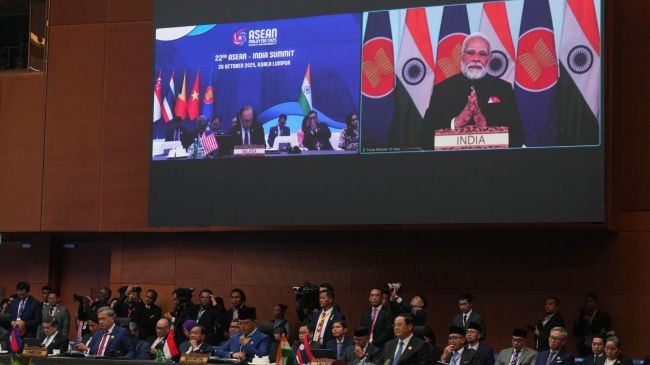
- 31 Oct 2025
In News:
- Prime Minister Narendra Modi virtually addressed the 22nd India–ASEAN Summit in Kuala Lumpur, reaffirming India’s commitment to enhancing cooperation in maritime security, digital inclusion, resilient supply chains, and economic integration.
- During the address, he announced that 2026 will be celebrated as the “ASEAN–India Year of Maritime Cooperation,” reflecting an intensified focus on the Indo-Pacific maritime domain. The remarks aligned with ASEAN’s theme under Malaysia’s chairmanship — “Inclusivity and Sustainability.”
Evolution of India–ASEAN Engagement
India’s engagement with ASEAN has evolved over more than three decades:
- 1992: Sectoral Dialogue Partnership initiated.
- 1996: Upgraded to Full Dialogue Partnership.
- 2002: India began regular participation in ASEAN Summits.
- 2009: ASEAN–India FTA in Goods (AITIGA) came into force;
- 2015: Services and Investment Agreements added.
- 2014 onwards: Transition from “Look East” to Act East Policy, increasing political, cultural and strategic connectivity.
- 2022: Partnership elevated to Comprehensive Strategic Partnership.
The partnership is grounded in shared civilisational links, especially through Buddhism, historical maritime routes, and cultural exchanges dating back to the Gupta and Srivijaya eras.
Recent Summit Highlights: Strategic Messaging
Despite PM Modi’s long-standing practice of physical participation in ASEAN summits, his virtual presence this year was noted as an unusual departure. Given the symbolic importance of leader-level diplomacy in ASEAN's consensus-driven ecosystem, some observers considered his absence a missed opportunity, especially amid strengthening bilateral ties with Malaysia after upgrading relations to a Comprehensive Strategic Partnership.
Nevertheless, PM Modi reaffirmed India’s intent to complement ASEAN’s Community Vision 2045 and India’s national vision of Viksit Bharat 2047, framing both as convergent long-term goals. He highlighted India’s role as a First Responder in regional crises, a position increasingly recognised across Southeast Asia.
Unlike previous years featuring extensive multi-point proposals, the 2025 address emphasised consolidation over expansion, centred primarily on maritime cooperation — a significant signal as the Philippines assumes ASEAN chairmanship in 2026 amid rising maritime tensions in the South China Sea.
Key Pillars of Cooperation
1. Maritime Security & Indo-Pacific Cooperation
- Joint patrols, coordinated naval exercises, and enhanced maritime domain awareness.
- Blue economy initiatives under the ASEAN–India Year of Maritime Cooperation (2026).
2. Economic Integration
- Review of the ASEAN–India Trade in Goods Agreement (AITIGA) to address market access constraints, streamline rules of origin, and reduce non-tariff barriers.
- Policymakers are urged to prioritise long-term regional integration over short-term protectionist anxieties.
3. Digital & Green Economy
- Cooperation in digital public infrastructure, cybersecurity, AI governance, renewable energy, green ports, and climate-resilient supply chains.
4. Connectivity Projects
- Acceleration of India–Myanmar–Thailand Trilateral Highway.
- Progress on the Kaladan Multi-Modal Transit Corridor, strengthening multimodal and economic connectivity.
5. Cultural Diplomacy & People-to-People Links
- ICCR scholarships, academic exchanges, tourism linkages, and the ASEAN–India Network of Think Tanks (AINTT).
- Emphasis on shared civilisational heritage and cultural exchanges.
Initiatives & Institutional Mechanisms
- ASEAN–India Plan of Action (2026–2030) focusing on trade, innovation, food security, agriculture, health, and education.
- India’s ?500 crore ASEAN–India Fund supporting capacity building, agriculture, and connectivity projects.
- Track 1.5 dialogue platforms reveal growing regional acknowledgement of India’s strategic role in Southeast Asia.
National Unity Day
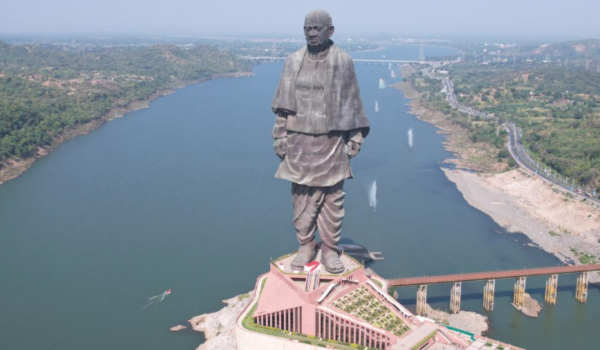
- 31 Oct 2025
In News:
- National Unity Day (Rashtriya Ekta Diwas) is observed annually on 31 October to mark the birth anniversary of Sardar Vallabhbhai Patel, India’s first Deputy Prime Minister and Home Minister.
- Introduced in 2014, the day highlights Patel's pivotal role in consolidating the nation by integrating over 560 princely states into the Indian Union at the time of Independence— a task that earned him the enduring title, the “Iron Man of India.”
- The year 2025 marks the 150th birth anniversary of Sardar Patel, and the commemorative events have been organised on an unprecedented scale at the Statue of Unity in Ekta Nagar, Gujarat, led by Prime Minister Narendra Modi.
- The celebrations highlight the theme “Unity in Diversity”, underscoring India’s multicultural character and the importance of national cohesion.
Historical Significance of Sardar Vallabhbhai Patel
- Born on 31 October 1875 in Nadiad, Gujarat, Patel initially practised law before joining the national movement under Mahatma Gandhi.
- His leadership in the Kheda Satyagraha (1918) and Nagpur Flag Satyagraha (1923) marked his rise as a mass leader.
- As President of the Ahmedabad Municipal Board (1924), he reformed urban infrastructure, sanitation and civic systems.
- The Bardoli Satyagraha (1928) elevated him to national prominence, earning him the honorific “Sardar.”
- At Independence, he was entrusted with unifying the 17 British provinces and integrating the princely states—an immense administrative and diplomatic feat.
- Served as Deputy Prime Minister and Home Minister (1947–1950) and also held charge of the Information and Broadcasting Ministry.
Cloud Seeding as a Pollution-Control Measure in Delhi

- 30 Oct 2025
In News:
With Delhi’s air quality plunging to severe levels each winter, the state government has renewed its call for cloud seeding as a potential intervention to reduce pollution. However, scientific assessments and governance experts warn that this approach offers limited, temporary relief and risks diverting attention from structural reforms required to address air pollution sustainably.
Why Delhi’s Air Quality Deteriorates in Winter
Delhi’s winter pollution is driven by a combination of meteorological and anthropogenic factors:
- Temperature Inversion: During winter, colder air remains trapped near the surface while warmer air lies above. This temperature inversion acts as a lid, preventing pollutants from rising and dispersing vertically.
- Low Wind Speeds: Weak winds limit horizontal movement of pollutants, causing particulate matter to accumulate in the lower atmosphere.
- Crop Residue Burning: Post-harvest stubble burning in Punjab, Haryana, and western Uttar Pradesh releases large quantities of smoke and suspended particles, which are carried to Delhi via prevailing winds.
- Dust and Urban Emissions: Vehicular emissions, construction dust, industrial exhaust, and waste burning remain trapped within the low boundary layer height, intensifying pollution.
- Post-Monsoon Stagnation: Stable high-pressure systems reduce atmospheric mixing, compounding North India’s chronic winter air quality problem.
What is Cloud Seeding?
Cloud seeding is a form of weather modification intended to enhance rainfall using chemical agents.
- Origin: First demonstrated in 1946 by Vincent J. Schaefer.
- Seeding Agents: Silver iodide, potassium iodide, sodium chloride, and dry ice are commonly used.
- Mechanism: The agents act as nuclei for condensation or ice-crystal formation, encouraging droplet growth. Once droplets become heavy, they fall as precipitation.
- Delivery Methods: Aircraft, rockets, or ground-based generators disperse particles into suitable moisture-laden clouds.
However, cloud seeding requires the presence of natural clouds with adequate moisture and cannot generate clouds on its own.
Scientific and Environmental Limitations
- Reliance on Existing Clouds: Delhi often lacks suitable cloud systems during peak pollution periods. Cloud seeding has no impact in the absence of adequate moisture.
- Weak Evidence of Effectiveness: Global scientific studies show inconsistent results. Even when rainfall occurs after seeding, establishing causality is difficult.
- Only Temporary Pollution Relief: Rain may wash away PM2.5 and PM10 temporarily, but pollution typically rebounds within 1–2 days. Secondary pollutants like ozone and sulphur dioxide remain unaffected.
- Environmental and Health Concerns: The use of silver iodide raises concerns regarding long-term ecological and health impacts due to chemical deposition. Evidence on safety is limited and inconclusive.
- Governance and Accountability Issues
- Unpredictable outcomes may lead to public criticism.
- Accountability becomes unclear if cloud seeding coincides with flooding or adverse weather events.
Ethical and Policy Concerns
- Misallocation of Resources: Investing in cloud seeding may divert funds from proven interventions.
- Distracting Public Attention: Temporary fixes risk undermining public trust and shifting focus away from systemic issues.
- Potential Misuse: Short-term optics may overshadow long-term environmental governance.
Real Solutions for Air Pollution Control
Experts emphasise that lasting improvement requires sustained structural action:
- Cleaner Transportation
- Strengthening public transport
- Transition to electric mobility
- Enforcing emission norms
- Sustainable Energy Transition
- Phasing down coal-based power
- Scaling up renewables
- Promoting clean industrial technologies
- Improved Waste Management
- Curbing open waste burning
- Efficient municipal systems
- Construction and Dust Control
- Enforcement of dust mitigation norms
- Use of green barriers and mechanised sweeping
- Agricultural Reforms
- Subsidising sustainable stubble management
- Promoting crop diversification in Punjab and Haryana
- Urban Planning Reforms
- Increasing green cover
- Reducing congestion through better mobility planning
Makhananomics
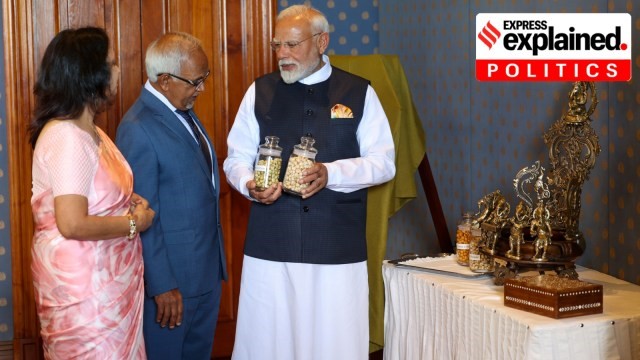
- 30 Oct 2025
In News:
- Prime Minister Narendra Modi has termed the establishment of the National Makhana Board as a transformative step and a “revolution” for the makhana sector.
- The initiative aims to unlock the commercial potential of Makhana (foxnut)—the dried edible seed of Euryale ferox, a prickly water lily that grows in freshwater ponds across South and East Asia—and address long-standing structural gaps in India’s leading production region, Bihar.
Makhana: Botanical, Nutritional and Cultural Features
- Makhana is derived from the seeds of the gorgon plant, recognised by its large prickly leaves and violet-white flowers. Traditionally used in ritual offerings, it has gained global traction as a nutrient-dense, low-fat “superfood”, expanding its market appeal among health-conscious consumers.
- The global makhana market, valued at USD 43.56 million in 2023, is projected to surpass USD 100 million by 2033, signalling strong export potential for India.
Production Profile: Bihar’s Dominance
- Bihar accounts for 90% of India’s makhana production, with cultivation concentrated in nine districts of the Mithilanchal region—particularly Darbhanga, Madhubani, Purnea, and Katihar, which together contribute 80% of the state’s output. Roughly 15,000 hectares under cultivation yield around 10,000 tonnes of popped makhana annually.
- Over 10 lakh families, mainly from the Mallah (fishermen) community, are involved in its cultivation, harvesting, and processing—making the crop socio-economically significant for Bihar’s rural economy.
Challenges: Low Productivity, Labour-Intensive Processes and Market Limitations
Despite being the largest producer, Bihar faces multiple structural constraints:
1. Weak Food Processing and Export Infrastructure
- Punjab and Assam dominate makhana exports despite minimal or no production.
- Bihar sells raw foxnuts cheaply to external food processing units (FPUs), which add value through flavouring, packaging, and branding—capturing higher profits.
2. Poor Market Organisation
- A long chain of intermediaries suppresses farmer earnings.
- Limited organised market systems hinder transparent pricing and revenue growth.
3. Labour-Intensive and Low-Productivity Cultivation
- Harvesting requires diving into water bodies and manually collecting seeds.
- Cleaning, sun drying, roasting, and popping are entirely manual processes.
- Adoption of high-yield varieties (HYVs) like Swarna Vaidehi and Sabour Makhana-1 remains low, keeping output at 1.7–1.9 tonnes/hectare, far below the HYV potential of 3–3.5 tonnes/hectare.
- Mechanisation attempts have been unsuccessful due to technological inefficiencies.
4. Institutional Weakness
- The ICAR National Research Centre for Makhana, established in 2002, has suffered understaffing, lack of administrative support, and underutilisation.
Government Efforts: Policy Push and Institutional Strengthening
The government is working to commercialise makhana through:
- Creation of the National Makhana Board with an initial budget of ?100 crore to address production, processing, value addition, and marketing.
- Promotion of makhana as a commercial crop with improved processing linkages.
- Expansion of industrial infrastructure, including cargo facilities at airports in Patna, Darbhanga, and Purnea, aimed at facilitating exports.
- Training, capacity-building, and linkage of farmers to government schemes.
- Awarding the GI tag to Mithila Makhana in 2022, recognising its unique geographical identity and boosting brand value.
Political Significance: Makhananomics in an Election Year
The push for makhana development carries strong electoral implications:
- With elections approaching, makhana has emerged as a key narrative in Bihar’s economic agenda.
- The sector directly impacts the Mallah community, which constitutes just 2.6% of the state population but commands significant influence in North Bihar owing to their 6% regional vote share.
- Success of “makhananomics” could bolster the ruling coalition’s political appeal by promising employment generation, economic upliftment, and rural prosperity.
CRYODIL
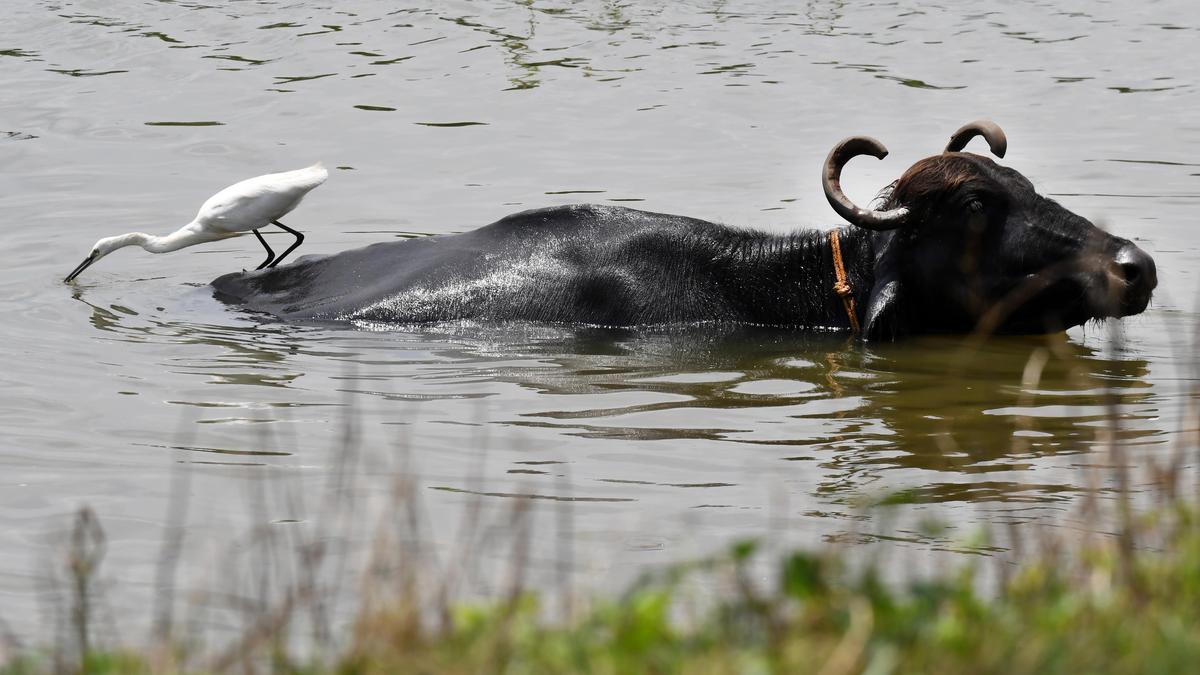
- 30 Oct 2025
In News:
- In a major breakthrough for India’s dairy and livestock sector, scientists at the ICAR–National Institute of Animal Nutrition and Physiology (NIANP), Bengaluru, have developed CRYODIL, the country’s first egg yolk-free, ready-to-use semen preservation solution for buffalo breeding.
- Designed to revolutionise artificial insemination practices, CRYODIL enables long-term storage and improved semen quality during cryopreservation, offering significant benefits to dairy productivity and livestock management.
What is CRYODIL?
CRYODIL is an innovative semen extender developed specifically for buffaloes. Unlike conventional extenders that rely on egg yolk for preservation, CRYODIL employs a purified whey-protein–based formulation to maintain semen motility and fertility. This eliminates the variability and contamination risk associated with egg-yolk-based solutions.
Key Features and Advantages
- Egg Yolk-Free Composition: Eliminates microbial contamination risks often linked to raw biological materials like egg yolk.
- Extended Shelf Life: Can preserve buffalo semen for up to 18 months, making long-distance transport and storage more efficient.
- Stable and Consistent Quality: Whey proteins ensure chemical uniformity, improving post-thaw sperm survival and movement.
- Field-Tested Innovation: Demonstrated successful results in trials conducted on 24 buffalo bulls, showing superior post-thaw semen motility and higher fertility potential.
- Cost-Effective Alternative: Indigenous development reduces reliance on imported commercial extenders, making it affordable for rural breeding programmes.
- Ready-to-Use Formulation: Simplifies the insemination process and enhances field applicability without requiring complex lab preparations.
Significance for India’s Dairy and Livestock Sector
- Boosts Buffalo Breeding Efficiency: India is home to the world’s largest population of buffaloes and relies heavily on them for dairy output. CRYODIL strengthens artificial insemination efforts by enhancing semen viability and improving conception rates.
- Advances Atmanirbhar Bharat: The indigenous formulation supports self-reliance, reducing dependence on imported extenders and promoting innovation under ICAR research initiatives.
- Improves Dairy Sector Economics: Higher fertility rates and improved breeding efficiency translate to increased milk yield, benefiting farmers and strengthening India’s dairy economy.
- Enhances Biosecurity and Hygiene: Removal of egg yolk minimises microbial load and contamination risks, making the solution safer for large-scale use in breeding centres.
VandeMataram – 150 Years Celebration
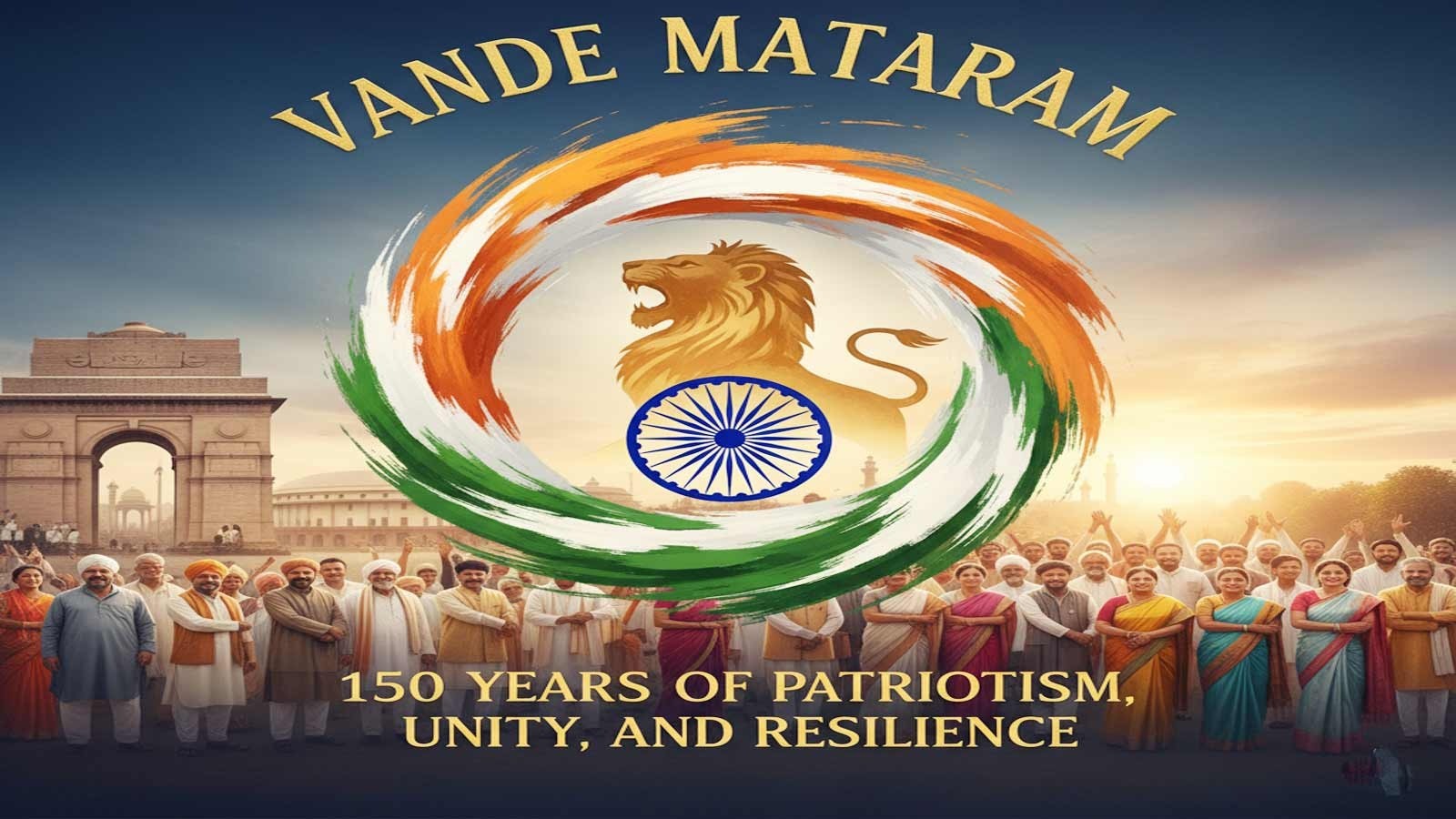
- 30 Oct 2025
In News:
Prime Minister Narendra Modi, in his October 2025 Mann Ki Baat address, called upon citizens to mark the 150th anniversary of VandeMataram.
Historical Origins and Evolution
- VandeMataram—meaning “I bow to thee, Mother”—was composed by Bankim Chandra Chattopadhyay in the 1870s in Sanskritised Bengali.
- It was later published in his novel Anandamath (1882), where the motherland was depicted symbolically as a divine, nurturing force.
- The song gained prominence during the freedom struggle. Its first public rendition was by Rabindranath Tagore at the 1896 Indian National Congress session, marking its transition from literary creation to a nationalistic anthem.
- Despite British censorship, it echoed across protest marches, swadeshi gatherings, and revolutionary movements, becoming an enduring symbol of defiance.
Role in National Movement and Political Debates
- During the early 20th century, the song became deeply embedded in anti-colonial resistance, especially during the Swadeshi Movement (1905) and later the Quit India Movement (1942). However, its later stanzas, portraying the motherland as a Hindu goddess, drew objections from the All-India Muslim League and some Muslim leaders.
- To maintain inclusivity, the Indian National Congress in 1937 officially adopted only the first two stanzas, which do not include religious imagery. This selective adoption reflected efforts to preserve unity in a diverse society.
- On 24 January 1950, the Constituent Assembly accorded equal honour to VandeMataram and Jana Gana Mana, defining the former as the national song and the latter as the national anthem.
Cultural, Symbolic and Constitutional Status
Today, VandeMataram holds a unique constitutional and cultural position:
- National Song Status: It enjoys the same respect as the national anthem as per Constituent Assembly resolutions.
- Parliamentary Tradition: An instrumental version is played at the end of every Parliament session.
- Cultural Identity: It continues to symbolise unity, patriotism, and emotional attachment to the motherland.
- Secular Projection: Emphasis remains on the first two stanzas to ensure inclusivity across religious communities.
- Judicial Affirmation: In 2022, the Delhi High Court reaffirmed that citizens should show equal respect to both the national anthem and national song.
Cyclone Montha
- 30 Oct 2025
In News:
- Cyclone Montha, a tropical cyclonic system that formed over the southeast Bay of Bengal in late October 2025, has emerged as one of the most significant weather events of the year for India’s eastern coastal states.
- The India Meteorological Department (IMD) has issued high-level warnings for Andhra Pradesh, Odisha, Tamil Nadu, and coastal Telangana as the system intensifies and advances toward landfall.
Formation and Meteorological Characteristics
- Cyclone Montha originated from a well-marked low-pressure area over the southeast Bay of Bengal around 24 October 2025.
- Under favourable atmospheric and oceanic conditions—warm sea surface temperatures above 28°C, high moisture availability, and low vertical wind shear—the system progressed from a depression to a deep depression by 26 October and further strengthened into a cyclonic storm. The IMD projected that it could intensify into a Severe Cyclonic Storm (SCS) before landfall.
- As of 27 October 2025, the storm was positioned approximately 350 km southeast of Kakinada, moving in a north-northwest direction at nearly 14 km/h.
- The IMD forecast predicted landfall between Machilipatnam and Kalingapatnam, near Kakinada, on the evening or night of 28 October. Wind speed estimates indicated gusts reaching 110 km/h, accompanied by “very rough to high” sea conditions and potential storm surge up to 1 metre.
Naming Mechanism and Regional Cyclone Governance
- “Montha” is a name contributed by Thailand to the World Meteorological Organization (WMO)/ESCAP Panel on Tropical Cyclones.
- Cyclone naming in the North Indian Ocean is overseen by a 13-member regional committee comprising India, Bangladesh, Pakistan, Sri Lanka, Myanmar, Maldives, Oman, Yemen, Qatar, Iran, UAE, Saudi Arabia, and Thailand.
- Each country submits suggested names, which are then assigned sequentially to future cyclones. This system enhances communication, public awareness, and clarity during simultaneous storm events.
Geographical Spread and Affected Regions
- While Andhra Pradesh remains the primary zone of impact—especially districts such as Kakinada, Konaseema, West Godavari, Krishna, Bapatla, Prakasam and Nellore—its effects range wider. Odisha has alerted 30 districts, Tamil Nadu has issued orange and yellow alerts for coastal belts, and Telangana is preparing for secondary rainfall impacts.
- Rayalaseema is also vulnerable due to the forecast of extremely heavy rainfall (>210 mm in 24 hours), increasing the risk of flash floods and landslides. Fisherfolk in all three major maritime states—Tamil Nadu, Andhra Pradesh, and Odisha—have been advised against venturing into the sea due to high waves and strong winds.
Expected Impacts
- Heavy to Extremely Heavy Rainfall: Isolated areas in coastal Andhra Pradesh and south Odisha may witness rainfall ≥21 cm in 24 hours, leading to flooding of rivers, drains, and agricultural fields.
- Strong Winds: Sustained winds of 90–100 km/h and gusts up to 110 km/h can uproot trees, damage kutcha houses, and disrupt electricity and telecom infrastructure.
- Storm Surge: Low-lying coastal pockets face inundation risks due to a possible storm surge of around 1 metre above the astronomical tide.
- Marine Hazards: Fishing vessels have been anchored, with over 900 boats already guided ashore. High swell waves and turbulent sea conditions threaten coastal ecosystems and livelihoods.
- Extended Weather Effects: Secondary effects may be felt in Telangana, Chhattisgarh, and even parts of West Bengal through rainfall, thunderstorms, and transportation disruptions.
Government Response and Preparedness Measures
State and central agencies have activated a coordinated disaster-response framework. Key measures include:
- Activation of emergency control rooms and pre-deployment of NDRF, SDRF, Coast Guard, and Army teams.
- Closure of schools in high-risk districts until 31 October.
- Stockpiling of essential commodities and readying PDS distribution systems.
- Evacuation of vulnerable populations including pregnant women and residents of low-lying areas.
- Temporary shelters being prepared with sanitation and food facilities.
- Suspension of fishing activities along the entire east coast stretch under threat.
- Continuous IMD bulletins issued for public safety instructions.
Inter-state cooperation has been emphasised, particularly between Odisha, Andhra Pradesh, and Tamil Nadu, to strengthen response logistics.
Children’s Booker Prize

- 29 Oct 2025
In News:
- The Booker Prize Foundation has announced the establishment of the Children’s Booker Prize, a landmark global award dedicated to fiction written for children aged 8 to 12 years.
- Scheduled to debut in 2027, this prize represents the first major expansion of the Booker brand into children’s literature and carries a purse of £50,000, matching the award value of its established sister prizes.
What the Prize Represents
- The Children’s Booker Prize aims to celebrate and elevate fiction for middle-grade readers, acknowledging the importance of early reading habits in shaping future generations of informed, imaginative, and engaged adults. Books originally written in English or translated into English will be eligible, making the award internationally inclusive.
- The Booker Prize Foundation, in partnership with the AKO Foundation, which supports arts, education, and environmental initiatives, seeks to nurture a global culture of reading and inspire literary excellence in children’s storytelling.
Eligibility and Key Features
- Age Category: Fiction aimed at 8–12-year-old readers.
- Geographic Scope: Open to books published in the UK or Ireland, regardless of the author’s nationality.
- Languages: Both original English works and translated works can be submitted.
- Prize Value: £50,000 (same as the adult Booker and International Booker), funded by the AKO Foundation.
- Selection Process: The first award in 2027 will be decided by a jury of children and adults, chaired by acclaimed British children’s author Frank Cottrell-Boyce, the current children’s laureate.
The submission process begins in early 2026, and the prize hopes to build enthusiasm and visibility around high-quality children’s literature.
Purpose and Vision
- According to Booker Prize Foundation Chief Executive Gaby Wood, the award aims to cultivate an enduring love for reading among younger audiences and to serve as a catalyst for literary engagement across generations. The initiative builds on the Booker’s legacy of recognising works that shape global literary culture.
Position Within the Booker Ecosystem
The Children’s Booker Prize joins two established awards under the Booker umbrella:
1. Booker Prize
- Founded: 1969
- Eligibility: Original novels written in English and published in the UK or Ireland.
- Prize Distribution: Award solely to the author.
- Objective: Celebrates outstanding English-language fiction.
- Indian Winners:
- Salman Rushdie – Midnight’s Children (1981)
- Arundhati Roy – The God of Small Things (1997)
- Kiran Desai – The Inheritance of Loss (2006)
- Aravind Adiga – The White Tiger (2008)
2. International Booker Prize
- Established: 2005; restructured in 2016.
- Eligibility: Translated fiction published in the UK or Ireland.
- Prize Distribution: Shared equally between author and translator.
- Objective: Promotes cross-cultural literary exchange and honours translation.
- Indian-Linked Winners:
- Geetanjali Shree – Tomb of Sand (2022) (Hindi, translated by Daisy Rockwell)
- Banu Mushtaq – Heart Lamp (2025) (Kannada, translated by Deepa Bhasthi)
Forex Reserves
- 29 Oct 2025
In News:
India’s foreign exchange reserves recorded a strong rise, increasing by $4.496 billion and reaching an all-time high of $702.28 billion, according to RBI data. This marks the second consecutive week of expansion, following a $2.176 billion rise in the previous reporting week. The jump was primarily driven by a steep increase in the value of gold reserves, even as foreign currency assets registered a decline.
Component-wise Movement of Reserves
1. Foreign Currency Assets (FCA)
- FCAs, which form the largest component of India’s forex reserves, fell by $1.692 billion to $570.411 billion.
- The changes reflect valuation effects due to fluctuations in currencies such as the euro, pound, and yen against the US dollar.
2. Gold Reserves
- Gold holdings rose sharply by $6.181 billion, taking their total value to $108.546 billion.
- The increase is attributed to RBI’s gold purchases and the global surge in gold prices.
3. Special Drawing Rights (SDRs)
- SDR holdings increased slightly by $38 million, reaching $18.722 billion.
4. Reserve Position in the IMF
- India’s reserve position with the IMF declined by $30 million to $4.602 billion.
Overall, the rise in gold assets offset the fall in foreign currency assets, helping the total reserves cross the historic $702-billion mark.
Understanding India’s Forex Reserves
Foreign exchange reserves represent external assets held by the RBI in the form of:
- Foreign currency assets
- Gold reserves
- Special Drawing Rights (SDRs)
- Reserve position in the IMF
These reserves act as a protective financial buffer for the economy.
Objectives and Functions
- Monetary Stability: Helps maintain stability of the Indian Rupee during volatility.
- Crisis Management: Provides liquidity support during balance of payments pressure or external shocks.
- Investor Confidence: Strengthens India’s credibility and ensures macroeconomic stability.
- Trade and Debt Support: Enables smooth settlement of import bills and external debt servicing obligations.
Key Features
- India’s forex reserves are valued on a weekly basis, factoring in global gold prices and New York closing exchange rates.
- The RBI manages these reserves following IMF data dissemination standards, maintaining international transparency.
- Foreign currency assets remain the largest component, followed by gold, SDRs, and India’s IMF reserve position.
Economic Significance
- Economic Security: Acts as an insurance mechanism against currency crises, capital outflows, or external market shocks.
- Policy Flexibility: Allows RBI to intervene in the forex market to curb excessive rupee volatility.
- Global Standing: Reinforces India’s global financial strength, supporting favourable sovereign credit ratings and greater investor trust.
KotadaBhadli
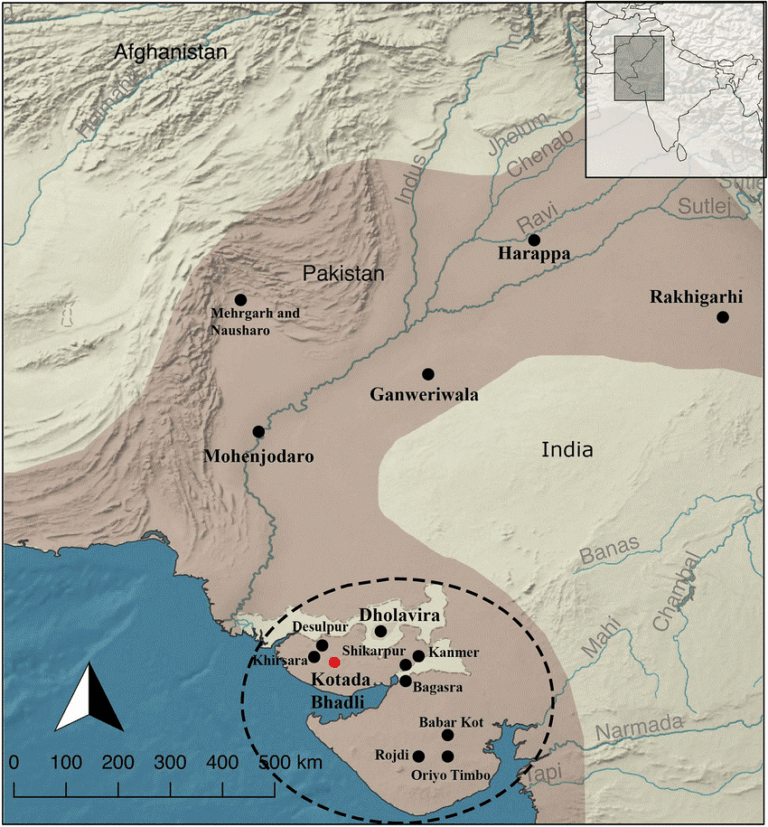
- 29 Oct 2025
In News:
- A recent multidisciplinary research study by Deccan College, Symbiosis School for Liberal Arts, and the Archaeological Survey of India (ASI) has reinterpreted the Harappan settlement of KotadaBhadli in Kutch, Gujarat, as the earliest known caravanserai, dating to the Mature Harappan phase (2300–1900 BCE).
- The study, published in L’Anthropologie (2025), pushes back the origins of organised trade infrastructure in South Asia by nearly 2,000 years, long before the rise of the Silk Route.
Location and Strategic Significance
- KotadaBhadli lies in the Kutch district of Gujarat, positioned along inland trade corridors linking prominent Harappan centres such as Dholavira, Lothal, and Shikarpur.
- Its placement reveals a purposeful design—serving as a rural logistical stopover facilitating long-distance trade between urban and coastal settlements.
Nature and Function of the Settlement
- Researchers have identified KotadaBhadli as a fortified rural halt, intended not for permanent habitation but for short-term stops by traders and their caravans.
- Its function aligns closely with caravanserai-style establishments known from later historical periods—providing shelter, security, food, and space for pack animals during overland journeys.
- The study clarifies a previously missing link in Harappan commerce: while trade with Mesopotamia and inland India was well documented, the operational mechanism—how traders and goods moved safely across long distances—was not fully understood. KotadaBhadli provides the first archaeological evidence to support this model.
Archaeological and Scientific Evidence
Excavations conducted between 2010 and 2013 and re-analysed through advanced techniques have revealed:
- A multi-roomed central complex, likely functioning as administrative or resting quarters.
- Fortified walls with bastions, confirming its role as a protected stopover.
- Large open courtyards, interpreted as holding areas for animals and storage of goods.
- Remains of food waste and imported material, suggesting active trade activity.
Cutting-edge scientific methods—including ground-penetrating radar, satellite mapping, magnetic surveys, isotopic and lipid analysis, and multiple dating techniques—have improved understanding of the site’s functional layout and confirm its zoning for logistical purposes.
Implications for Harappan Trade Networks
The findings demonstrate that the Harappan economy had a structured overland trade system, supported by a network of small fortified checkpoints rather than solely urban market centres. This reveals an advanced level of planning and coordination within Harappan economic systems.
Key implications include:
- Chronological significance: Organised trade infrastructure existed in South Asia more than two millennia before the Silk Route.
- Economic insight: Harappans displayed sophisticated logistics and administrative planning.
- Civilizational understanding: The Harappan world was not merely dependent on ports like Lothal or trade with Mesopotamia—it also relied on inland support systems that sustained commerce.
Amoebic meningoencephalitis
- 29 Oct 2025
In News:
Kerala has reported yet another fatal case of amoebic meningoencephalitis in 2025, deepening public health concerns in the state. With this incident, Kerala’s cases linked to amoebic meningoencephalitis in 2025 have risen to 27, highlighting an emerging disease surveillance challenge. Health authorities are still investigating the exact source of infection in the latest case, as environmental exposure remains the primary risk factor.
Understanding Amoebic Meningoencephalitis
- Nature of the Disease: Amoebic meningoencephalitis, or Primary Amebic Meningoencephalitis (PAM), is a rare but rapidly progressing and typically fatal brain infection. It occurs when a free-living amoeba invades the central nervous system, causing severe inflammation and extensive brain tissue damage.
- Causative Organism: The infection is caused by Naegleria fowleri, often referred to as the “brain-eating amoeba.” This thermophilic organism is naturally present in warm freshwater bodies and moist soil.
Transmission and Environmental Factors
- The disease is not transmitted person-to-person.
- Infection occurs when contaminated water enters the nasal cavity, allowing the amoeba to migrate through the olfactory nerve into the brain.
- Naegleria fowleri proliferates in warm freshwater, particularly during summer months, in environments such as:
- Lakes
- Ponds
- Hot springs
- Poorly chlorinated swimming pools
- Warm freshwater streams and rivers
Kerala’s warm and humid climate, combined with widespread freshwater sources, may create favourable conditions for the organism, necessitating stronger environmental monitoring and public awareness.
Clinical Presentation
Early Symptoms (1–9 days after exposure):
- Fever
- Headache
- Nausea
- Vomiting
Advanced Symptoms:
- Stiff neck
- Seizures
- Confusion
- Loss of balance
- Hallucinations
- Progressive neurological deterioration
The disease often leads to coma and death within days, making it one of the deadliest infections of the central nervous system.
Treatment and Mortality
Treatment remains highly challenging, with over 95% mortality. Some survival cases have been associated with:
- Early diagnosis
- Rapid initiation of drugs like amphotericin B and miltefosine
- Aggressive supportive care in intensive settings
However, the overall prognosis remains extremely poor due to the fast progression of the infection.
Preventive Measures
Given the absence of person-to-person transmission, prevention focuses on reducing environmental exposure:
- Avoid swimming or diving in untreated freshwater bodies, especially during warmer months.
- Use nose clips while entering freshwater.
- Ensure proper chlorination and maintenance of swimming pools.
- Avoid stirring mud or sediment in shallow freshwater areas where amoebae thrive.
PM- Ayushman Bharat Health Infrastructure Mission (PM-ABHIM)
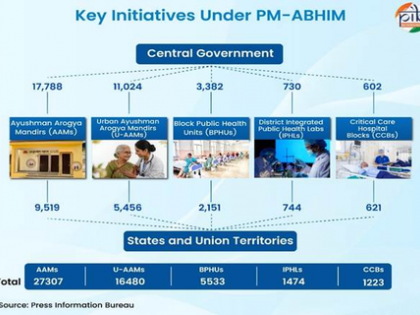
- 29 Oct 2025
In News:
The Pradhan Mantri–Ayushman Bharat Health Infrastructure Mission (PM-ABHIM), launched in October 2021, represents one of India’s most ambitious national health-system strengthening initiatives. Conceived in the aftermath of COVID-19, the Mission aims to build a resilient, modern, and self-reliant public health infrastructure capable of responding effectively to future pandemics and health emergencies.
Mission Structure and Financial Outlay
- PM-ABHIM is implemented as a Centrally Sponsored Scheme (CSS) with select Central Sector components, with a total allocation of ?64,180 crore for the period 2021-22 to 2025-26.
- This multi-layered programme focuses on fortifying health infrastructure from the village level to the district level, while simultaneously creating a national network for disease surveillance and laboratory capacity.
Key Components of PM-ABHIM
1. Primary and Secondary Healthcare Strengthening
The Mission envisions comprehensive infrastructure development through:
- Ayushman Arogya Mandirs (AAMs) replacing and upgrading Sub-Centres and Primary Health Centres.
- Urban Health and Wellness Centres established in slum and underserved urban areas.
- Block Public Health Units (BPHUs) to enhance diagnostic, surveillance, and public health management capacity at the block level.
These interventions aim to fill service delivery gaps and ensure equitable access to quality healthcare, especially in rural and vulnerable regions.
2. District-Level Critical Health Infrastructure
- Establishment of Critical Care Hospital Blocks (CCHBs) in every district to provide advanced and emergency care.
- Creation and upgradation of Integrated District Public Health Labs (IDPHLs) for comprehensive testing and epidemiological support.
These facilities are intended to strengthen district-level readiness for public health emergencies and mass-casualty situations.
3. Strengthened Disease Surveillance and Pandemic Preparedness
A significant feature of PM-ABHIM is the creation of an IT-enabled, real-time disease surveillance system. This network links:
- Block-level labs
- District surveillance units
- Regional surveillance centres
- National institutions
The government has highlighted that PM-ABHIM has substantially enhanced India’s health surveillance capabilities, enabling faster detection, notification, and response during outbreaks. The integration of digital tools allows seamless data sharing and analytics—essential for early warning and rapid containment strategies.
4. Research, Innovation, and One Health Approach
The Mission supports:
- Advanced research on COVID-19, emerging infectious diseases, and health emergencies.
- Laboratories and platforms promoting scientific innovation.
- Adoption of the One Health approach, recognising the linkages between human, animal, and environmental health to prevent zoonotic diseases.
Policy Significance
PM-ABHIM marks a paradigm shift from reactive health crisis management to proactive preparedness. Its multi-tiered infrastructure plan, focus on training, surveillance networks, and integration of modern technologies positions India to handle:
- Emerging infectious diseases
- Climate-linked health threats
- Biosecurity risks
- Mass public health emergencies
The Mission also contributes to the broader goals of Ayushman Bharat, Universal Health Coverage (UHC), and Sustainable Development Goals (SDGs), by bridging regional disparities and strengthening healthcare accessibility.
Rashtriya Vigyan Puraskar

- 28 Oct 2025
In News:
- The Government of India has announced the Rashtriya Vigyan Puraskar (RVP) 2025, the nation’s premier recognition for exceptional achievements in science, technology, and innovation.
- The awards acknowledge landmark contributions by scientists, technologists, young researchers, and collaborative teams working across diverse domains that drive India’s S&T leadership and national development goals.
About the Rashtriya Vigyan Puraskar
Instituted by the Government of India, the RVP honours outstanding scientific excellence and impactful innovation. The awards are conferred in four categories:
- Vigyan Ratna (VR): Recogniseslifetime achievements in any field of science and technology.
- Vigyan Shri (VS): Honoursdistinguished contributions by individuals in any scientific discipline.
- Vigyan Yuva– Shanti Swarup Bhatnagar (VY-SSB): Celebrates exceptional contributions by young scientists up to 45 years of age.
- Vigyan Team (VT): Awarded to a team of 3 or more researchers for exceptional collaborative work.
The awards span 13 scientific domains, including Physics, Chemistry, Biological Sciences, Engineering, Agriculture, Environmental Science, Earth Science, Atomic Energy, Space Science and Technology, Medicine, Mathematics & Computer Science, Technology & Innovation, and allied interdisciplinary fields.
Selection Process
- Nominations for the 2025 edition were accepted through the government portal (awards.gov.in) between October 4 and November 17, 2024.
- An expert committee comprising the Principal Scientific Advisor, secretaries of leading science departments, heads of national academies, and domain specialists rigorously evaluated the submissions.
- The final decisions were coordinated by the Rashtriya Vigyan Puraskar Secretariat.
Significance of the Awards
The Rashtriya Vigyan Puraskar:
- Strengthens India’s scientific ecosystem
- Motivates emerging researchers and innovators
- Recognises pathbreaking discoveries and technological advancements
- Reinforces India’s strategic vision of becoming a global S&T leader
- Encourages collaborative, interdisciplinary research
The award ceremony will be organised separately, with formal notifications issued to the awardees.
Subansiri Lower Hydroelectric Project
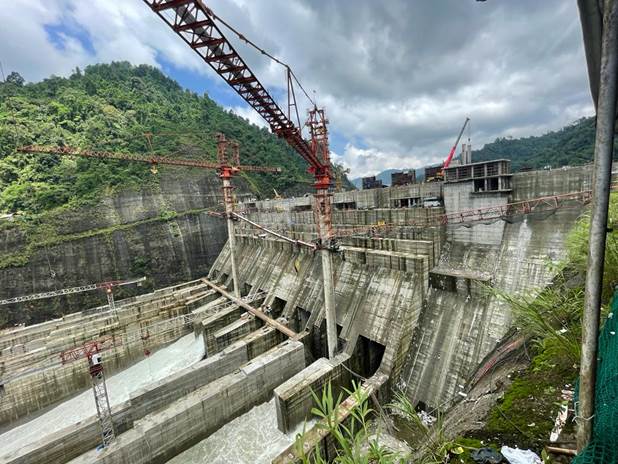
- 28 Oct 2025
In News:
India’s largest hydroelectric venture, the 2000 MW Subansiri Lower Hydroelectric Project, has officially entered its commissioning phase after years of delays, protests, and structural overhauls. Located at Gerukamukh on the Arunachal Pradesh–Assam border, the project marks a crucial milestone in India’s renewable energy expansion, especially in the Northeast.
Overview of the Project
- Type: Run-of-the-river hydroelectric project
- Capacity: 2000 MW (8 × 250 MW units)
- River:Subansiri River, a major tributary of the Brahmaputra
- Developer: National Hydroelectric Power Corporation (NHPC)
- Location:Gerukamukh, in the foothills of the Himalayas
- Construction Timeline: Work began in 2005; commissioning initiated in 2025
- Financing Structure: 70% equity and 30% debt; Central government provided budgetary support as equity
When fully operational, it will be India’s single largest hydroelectric power plant, providing a major boost to national energy security and clean energy capacity.
Engineering Features
- Concrete Gravity Dam:
- Height: 116 m from riverbed; 130 m from foundation
- Length: 284 m
- Reservoir Storage Capacity: 1.37 km³
- Power Generation System:
- Eight Francis-type turbines, each generating 250 MW
- Eight headrace tunnels, eight surge tunnels, and eight circular penstocks
- A 35 m-long, 206 m-wide tailrace channel to release water back into the river
Recent Developments – Commissioning Phase
On the first mechanical run, Unit-I generated 250 MW, marking the start of wet commissioning and its synchronization with the national grid. NHPC described this achievement as a “landmark moment for India’s hydropower landscape,” signalling steady progress toward bringing the remaining units online.
- Three additional units are expected to be commissioned within the year, adding 1,000 MW of clean energy to the grid.
- Once all 8 × 250 MW units become operational, the project will light millions of households and reinforce India’s push toward sustainable, reliable, and carbon-free energy.
Historical Delays and Controversies
The project’s trajectory has been far from smooth:
- Original commissioning target: December 2012
- Sanctioned: 2003
- Work halted: 2011–2019 due to widespread protests
Concerns raised by local communities and civil society groups:
- High seismic vulnerability of the region
- Potential ecological disruption
- Fear of downstream flooding
- Impact on riverine ecosystems and local livelihoods
Organisations such as the All Assam Students’ Union (AASU) demanded a complete reassessment of safety and environmental impacts.
Expert Review and Redesign
During the eight-year suspension:
- Expert committees from IIT Guwahati and the National Dam Safety Authority (NDSA) evaluated structural integrity and proposed design modifications.
- Recommended changes led to:
- Enhanced seismic reinforcements
- Additional grouting
- Redesign of spillways
- Strengthened safety protocols
The redesign ensured compliance with updated safety, hydrological, and structural norms before work resumed in October 2019.
Cost Escalation
The prolonged delays and modifications caused a substantial budget escalation:
- Initial Estimate: ?6,285 crore
- Revised Estimate: ?26,075 crore
- Cost Increase Drivers:
- Inflation
- Monsoon-induced damage
- Prolonged suspension of civil works
- Safety overhaul and redesign
Strategic Importance
- A cornerstone of India’s renewable energy strategy in the Northeast
- Strengthens national energy security with clean, baseload hydro capacity
- Supports grid stability and contributes to India’s climate goals
- Symbol of engineering resilience and India’s capability in executing large-scale infrastructure projects
NHPC leadership hailed the achievement as an emblem of “India’s unstoppable march towards a cleaner and self-reliant energy future.”
East Timor Joins ASEAN
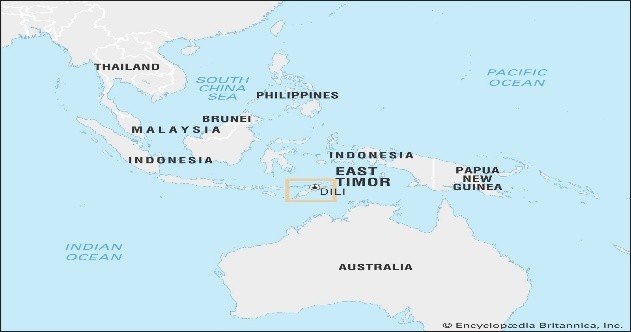
- 28 Oct 2025
In News:
East Timor (Timor-Leste) was formally admitted as the 11th member of the Association of Southeast Asian Nations (ASEAN) at the 47th ASEAN Summit in Kuala Lumpur, marking the organisation’s first expansion since the late 1990s.
Historical Milestone for East Timor
- Prime Minister Xanana Gusmão declared the moment “historic,” noting that ASEAN membership reflects both the aspirations and resilience of the Timorese people. President José Ramos-Horta, a Nobel Peace Prize laureate, and Gusmão—both icons of the independence movement—lead the nation as it navigates socio-economic challenges such as high unemployment, persistent malnutrition, and widespread poverty (with 42% of the population living below the national poverty line).
- East Timor’s journey to statehood has been arduous. A former Portuguese colony for over four centuries, it declared independence in 1975, only to face a 24-year occupation by Indonesia that claimed tens of thousands of lives. AUN-supervised referendum in 1999 paved the way to sovereignty, which was finally restored in 2002, making it one of the world’s youngest nations.
Why East Timor’s ASEAN Membership Matters
Malaysian Prime Minister Anwar Ibrahim, chairing the summit, emphasised that East Timor’s entry “completes the ASEAN family,” reflecting shared regional identity and a commitment to equitable growth. Analysts view the expansion as a declaration of ASEAN’s inclusivity and adaptability, especially amid global geopolitical volatility and rising protectionism.
Membership grants East Timor greater access to:
- ASEAN’s free trade arrangements
- Regional investment opportunities
- Broader markets and labour mobility
- Platforms for cooperation in education, technology, and digital economy
For a small, resource-dependent nation with a youthful demographic—nearly two-thirds of its people are under 30—ASEAN integration offers new possibilities for job creation, capacity building, and economic diversification. With oil and gas reserves declining, the government seeks fresh pathways for economic resilience.
East Timor: Key Facts
- Official Name: Democratic Republic of Timor-Leste
- Location: Eastern half of Timor Island in the Malay Archipelago; bordered by Indonesia and the Timor Sea
- Capital: Dili
- Geography: Mountainous terrain; highest peak Mount Tatamailau (2,963 m); tropical climate; rich biodiversity
- Population: ~1.4 million
- Economy: Predominantly dependent on hydrocarbons
East Timor applied for ASEAN membership in 2011 and was granted observer status in 2022, culminating in full accession in 2025.
About ASEAN and Its Relevance
- The Association of Southeast Asian Nations (ASEAN) is a regional intergovernmental organisation established in 1967 with the signing of the Bangkok Declaration by Indonesia, Malaysia, the Philippines, Singapore, and Thailand. Its headquarters is located in Jakarta, Indonesia.
- Current Membership (11 Countries):Indonesia, Malaysia, Philippines, Singapore, Thailand, Brunei, Vietnam, Laos, Myanmar, Cambodia, and East Timor.
- Core Goals:
- Promote political stability through dialogue and diplomacy
- Advance economic integration via AFTA and RCEP
- Strengthen cooperation on climate change, disaster response, and transnational threats
- Foster socio-cultural exchange and people-to-people connectivity
- Engage global powers through mechanisms like ASEAN+3 and East Asia Summit (EAS)
Significance for Regional Dynamics
East Timor’s accession:
- Reinforces ASEAN’s commitment to regionalism and openness, countering trends of protectionism
- Expands the bloc’s political influence and strengthens its collective strategic posture
- Enhances ASEAN’s identity as a community representing diverse political and economic systems
- Encourages equitable development within the region’s smallest and youngest member state
Operation Fire Trail
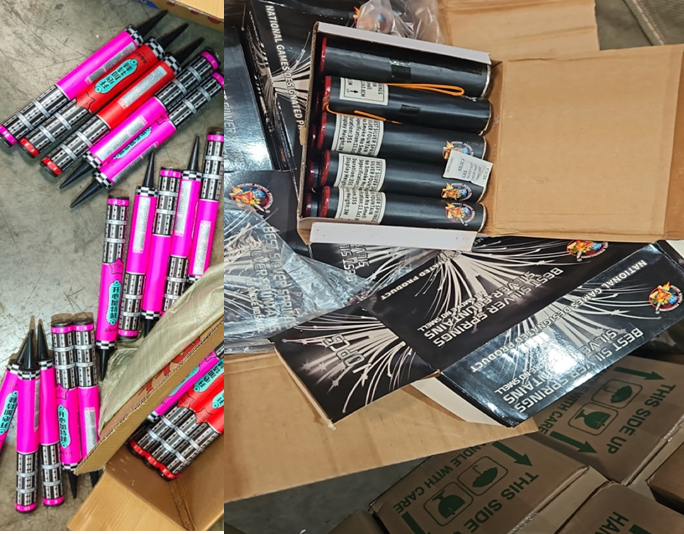
- 28 Oct 2025
In News:
The Directorate of Revenue Intelligence (DRI), under the Ministry of Finance, continues its nationwide anti-smuggling campaign titled “Operation Fire Trail”, aimed at curbing the illegal import of hazardous foreign-origin firecrackers into India. The operation focuses on intercepting smuggling networks that violate India’s trade regulations, safety norms, and environmental standards.
About Operation Fire Trail
- Nature of Operation:Operation Fire Trail is an intelligence-driven enforcement initiative designed to detect and prevent the illegal entry of non-compliant Chinese firecrackers into India. These pyrotechnic materials often contain harmful chemicals, posing severe risks to public health, safety, and the environment.
- Implementing Agency:The operation is carried out by the Directorate of Revenue Intelligence (DRI)—India’s apex anti-smuggling agency.
- Objectives:
- To dismantle organised smuggling syndicates involved in routing foreign firecrackers into India using false declarations.
- To enforce compliance with licensing norms mandated by the Directorate General of Foreign Trade (DGFT) and Petroleum and Explosives Safety Organisation (PESO) under the Explosives Rules, 2008.
- To strengthen India’s customs surveillance and safeguard national security.
Recent Seizure at Nhava Sheva Port
In one of the largest seizures during the ongoing operation, DRI intercepted a 40-foot container at Nhava Sheva port that had originated from China. The consignment, falsely declared as containing "leggings," was destined for ICD Ankleshwar.
A detailed examination revealed:
- 46,640 pieces of smuggled Chinese-origin firecrackers.
- Total estimated value: ?4.82 crore.
- Firecrackers were concealed behind a thin layer of garments to evade detection.
Subsequent raids led to the confiscation of incriminating documents exposing the smuggling syndicate’s modus operandi. A key suspect from Veraval, Gujarat, was arrested, marking a major breakthrough in the case.
Legal and Regulatory Framework
- Import of firecrackers into India is classified as “Restricted” under the ITC (HS) classification of the Foreign Trade Policy.
- Legitimate imports require:
- Valid DGFT licence, and
- Approval from PESO under the Explosives Rules, 2008.
- Smuggling of non-compliant fireworks bypasses these safeguards and introduces hazardous substances into the domestic market.
Significance of the Crackdown
- Protection of Public Safety: Smuggled firecrackers are often made using unsafe chemical compositions. Their uncontrolled entry poses serious risks of fire, explosions, and injury.
- Safeguarding Port and Supply Chain Infrastructure: Hazardous consignments threaten critical port infrastructure, warehouse safety, and logistics operations.
- Strengthening Enforcement Capacity: Operation Fire Trail enhances India’s intelligence-led enforcement, boosts customs vigilance, and disrupts transnational smuggling networks.
- Environmental Protection: Many imported Chinese firecrackers release toxic pollutants, violating environmental norms. Curtailing their inflow supports India’s pollution-control efforts.
- Supporting Domestic Manufacturing: The operation discourages cheap illegal imports and promotes domestic, compliant firecracker production aligned with safety and environmental regulations.
Global Multidimensional Poverty Index (MPI) 2025
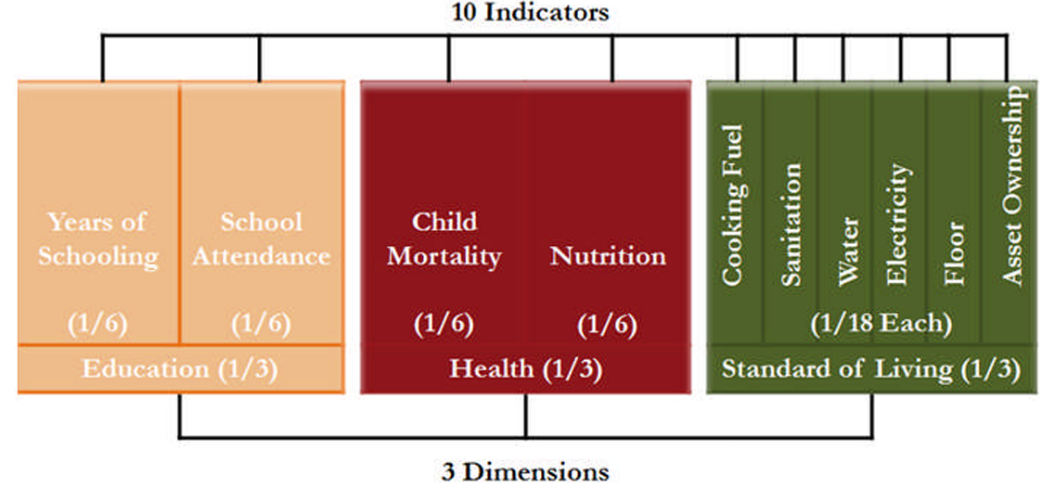
- 28 Oct 2025
In News:
- The United Nations Development Programme (UNDP) and the Oxford Poverty and Human Development Initiative (OPHI) released the Global Multidimensional Poverty Index (MPI) 2025 Report, titled “Overlapping Hardships: Poverty and Climate Hazards”.
- The report provides an evidence-based assessment of poverty that goes beyond income measures, highlighting how climate vulnerability and multidimensional deprivation reinforce each other.
About the Global MPI
- Nature of Index: The MPI is a global composite measure of acute poverty, capturing simultaneous deprivations in health, education, and standard of living through 10 indicators.
- Introduced: First featured in the 2010 Human Development Report.
- Published by: Jointly by UNDP Human Development Report Office and OPHI, annually since 2010.
- Objective: To assess:
- Who is poor
- How they are poor
- How deprivations overlap across households
- Enabling policymakers to align development strategies with SDG-1 (No Poverty).
- Methodology Highlights:
- 3 Dimensions: Health, Education, Living Standards.
- 10 Indicators: Nutrition, child mortality, years of schooling, school attendance, cooking fuel, sanitation, drinking water, electricity, housing, assets.
Global Trends in the MPI 2025
Poverty Headcount & Severity
- Out of 6.3 billion people assessed across 109 countries, 1.1 billion (18.3%) live in acute multidimensional poverty.
- 43.6% of the poor (≈501 million) experience severe poverty—being deprived in half or more indicators.
Regional Distribution of Poverty
- Sub-Saharan Africa (565 million) and South Asia (390 million) account for 83% of global poverty.
- Sub-Saharan Africa alone contains 49.2% of the world’s multidimensionally poor.
Children Disproportionately Affected
- Children form 33.6% of the global population but 51% of those living in multidimensional poverty.
- Malnutrition and disruption in schooling are primary drivers of child deprivation.
Middle-Income Countries as Core Contributors
- Nearly 740 million of the global poor live in middle-income countries, highlighting inadequacies of income-based poverty classifications.
Rural Concentration
- 83.5% of all multidimensionally poor live in rural areas, despite these areas comprising only 55% of total population.
Climate Hazard Exposure
- Nearly 80% of poor populations live in climate-vulnerable areas.
- Climate hazards include droughts, floods, extreme heat, and erratic precipitation patterns.
- South Asia has the highest number of poor people living in climate hazard zones.
Poverty & Climate Vulnerability in SIDS
- 22 Small Island Developing States (SIDS) show a combined poverty rate of 23.5%, higher than the developing world average.
- Rising sea levels (projected up to 70 cm by 2080–2099) threaten livelihoods in nations such as Belize, Comoros, and Samoa.
Post-Pandemic Stagnation
- Poverty reduction has slowed, with many countries witnessing stagnation or reversal due to:
- Inflation
- Conflict
- Climate shocks
- Post-pandemic economic disruptions
India in Global MPI 2025
Significant Poverty Reduction
- India reduced multidimensional poverty from 55.1% (2005–06) to 16.4% (2019–21).
- Over 414 million people moved out of multidimensional poverty.
- India's progress is among the fastest globally.
Persistent Child Poverty
- Children continue to face high deprivation, particularly in:
- Nutrition
- Sanitation
- Housing
- Cooking fuel
Climate Vulnerability and Poverty Link
- Nearly 99% of India’s poor live in climate-exposed regions.
- Heatwaves, floods, droughts, and air pollution intensify hardship and threaten livelihood security.
Drivers of MPI Improvement
India’s poverty reduction correlates with large-scale welfare and infrastructure missions:
- Swachh Bharat Mission – sanitation improvement
- PM Ujjwala Yojana – access to clean cooking fuel
- PM-Awas Yojana – housing for rural and urban poor
- Jal Jeevan Mission – access to clean drinking water
- Universal electrification initiatives
Key Challenges
- Rural–Urban Divide: 83% of the multidimensionally poor live in rural regions.
- Climate shocks: Frequent floods and droughts reverse development gains.
- Data Gaps: Lack of updated household-level data limits monitoring and policy targeting.
- Gender disparities: Women face inequalities in nutrition, education, healthcare, and asset ownership.
- Financial constraints: Several states struggle with fiscal capacity, affecting social protection and climate adaptation.
Policy Recommendations
- Integrate Climate & Poverty Policy: Adopt climate-resilient strategies combining:
- Green infrastructure
- Social protection
- Disaster risk reduction
- Localised Poverty Tracking: Develop district-level MPI dashboards for real-time, granular monitoring.
- Promote Green Livelihoods: Expand employment in:
- Renewable energy
- Organic farming
- Circular economy sectors
- Enhance Global Support: Strengthen access to:
- Climate finance
-
- Concessional aid
- Technology transfers
- Gender and Child-Focused Interventions: Reinforce programs for:
- Nutrition
- Maternal health
- Education
- Clean cooking energy
MAHA MedTech Mission
- 27 Oct 2025
In News:
The Anusandhan National Research Foundation (ANRF), in collaboration with the Indian Council of Medical Research (ICMR) and the Bill & Melinda Gates Foundation, has launched the Mission for Advancement in High-Impact Areas (MAHA)–Medical Technology (MedTech).This landmark initiative seeks to accelerate innovation in India’s medical technology ecosystem, reduce dependence on costly imports, and ensure affordable, high-quality healthcare technologies for all.
About the MAHA MedTech Mission
- Launched by: ANRF, in partnership with ICMR and Gates Foundation
- Mission Duration: 5 years
- Deadline for Concept Note Submission: 7 November 2025
- Implemented through: ANRF online portal – www.anrfonline.in
The mission represents a strategic push under the government’s Aatmanirbhar Bharat vision to strengthen India’s domestic MedTech sector, which is currently import-heavy and fragmented.
Objectives of the MAHA MedTech Mission
- Public Health Impact:
- Promote technologies addressing priority disease areas such as tuberculosis, cancer, neonatal and maternal care, and primary healthcare.
- Expand access to safe, high-quality medical care across India.
- Affordability and Accessibility:
- Support innovative solutions that reduce healthcare costs while maintaining quality standards.
- Promote equitable access to advanced medical devices, especially in rural and underserved regions.
- Self-Reliance and Competitiveness:
- Catalyze indigenous research, manufacturing, and commercialization in MedTech.
- Foster industry–academia collaboration and boost India’s global competitiveness in medical innovation.
Scope of the Mission
The MAHA MedTech Mission will support a wide range of medical technologies and innovations, including:
- Medical devices and equipment
- In-vitro diagnostics (IVDs) and subcomponents
- Implants and surgical instruments
- Assistive and wearable devices
- Consumables and disposables
- AI/ML-driven software-based medical platforms
- Robotics, imaging, and minimally invasive technologies
- Point-of-care and molecular diagnostics
These innovations will target priority national health areas, promoting early disease detection, efficient treatment delivery, and improved healthcare infrastructure.
Funding Mechanism
- Milestone-linked funding:
- ?5–25 crore per project
- Up to ?50 crore for exceptional projects with transformative potential.
- Eligible Applicants:
- Academic and R&D institutions
- Hospitals and clinical research centers
- Startups and MSMEs
- Established MedTech industries
- Interdisciplinary collaborations between public and private entities
The funding structure encourages translational research, product prototyping, clinical validation, and commercialization of indigenous medical technologies.
Enabling Support Framework
The Mission also provides institutional and regulatory facilitation through several national support programs:
- Patent Mitra:Facilitates intellectual property protection, patent filing, and technology transfer.
- MedTech Mitra:Provides regulatory guidance, helps in obtaining clinical and market approvals, and supports compliance with national and international standards.
- Clinical Trial Network:Offers access to a national network of hospitals and research centers for clinical validation and evidence generation.
- Mentorship and Industry Linkages:Access to industry mentors, market experts, and commercialization partners to support end-to-end product development.
Notice to Airmen (NOTAM)

- 27 Oct 2025
In News:
India has recently issued a Notice to Airmen (NOTAM) for a large-scale tri-services military exercise, “Ex Trishul,” scheduled along the Pakistan border. The announcement highlights India’s focus on joint operational preparedness, self-reliance, and technological innovation in defence.
About Notice to Airmen (NOTAM)
- Notice to Airmen (NOTAM), also known as Notice to Air Missions, is an official notification issued by national aviation authorities to inform airspace users about temporary or permanent changes that may affect flight operations.
- Purpose: NOTAMs ensure flight safety by providing timely information about:
- Changes in aeronautical facilities or services
- Temporary airspace restrictions
- Hazards or obstacles along flight paths
- Military activities, such as exercises or missile tests
They are critical for pilots, air traffic controllers, and flight planners, allowing them to modify flight paths or schedules to ensure operational safety.
Common Reasons for Issuing NOTAMs
- Airshows, parachute jumps, or glider operations
- VIP movements (e.g., heads of state)
- Runway or taxiway closures
- Unserviceable navigational aids or airport lighting
- Construction activities or temporary obstacles near airfields
- Military exercises involving restricted or closed airspace
NOTAMs are disseminated rapidly via aeronautical communication systems, online aviation portals, and electronic flight planning tools, enabling real-time updates for all stakeholders.
India’s Recent NOTAM: Context and Significance
The recent NOTAM covers a large segment of India’s western frontier, extending up to 28,000 feet, indicating one of the largest joint operational drills in recent years. Satellite imagery has highlighted the vast scale of the restricted airspace, reflecting India’s intent to conduct multi-domain, tri-service coordination along the Pakistan border.
This development follows Operation Sindoor (May 2025)—a precision air campaign against Pakistan’s terror infrastructure launched in response to the Pahalgam terror attack (April 2025). The operation neutralized over 100 terrorists, marking one of the most intense India–Pakistan military confrontations in decades.
About Exercise Trishul
Exercise Trishul (Ex Trishul) is a tri-services military exercise involving the Indian Army, Navy, and Air Force. It aims to strengthen jointness, operational integration, and technological innovation, aligning with the government’s JAI Vision—Jointness, Aatmanirbharta, and Innovation.
Objectives
- To enhance inter-service coordination in high-tempo, multi-domain operations.
- To test indigenous systems and weapons platforms developed under the Aatmanirbhar Bharat initiative.
- To refine tactics, techniques, and procedures (TTPs) suited to emerging hybrid and asymmetric threats.
Key Operational Components
- Joint Operations:
- Coordinated manoeuvres across desert, creek, and coastal sectors, led by Southern Command.
- Amphibious operations off the Saurashtra coast, integrating Navy and Army assets.
- Air defence missions, reconnaissance, and electronic warfare (EW) exercises by the Air Force.
- Multi-Domain Integration:
- Exercises in Intelligence, Surveillance, and Reconnaissance (ISR) networks.
- Deployment of cyber warfare and space-enabled systems.
- Incorporation of Artificial Intelligence–based decision support and digital command systems.
- Indigenous Focus:
- Use of home-grown technologies in sensors, communication networks, and combat systems.
- Demonstrates the operational maturity of India’s defence manufacturing ecosystem.
Mahe- Anti-Submarine Warfare Shallow Water Craft
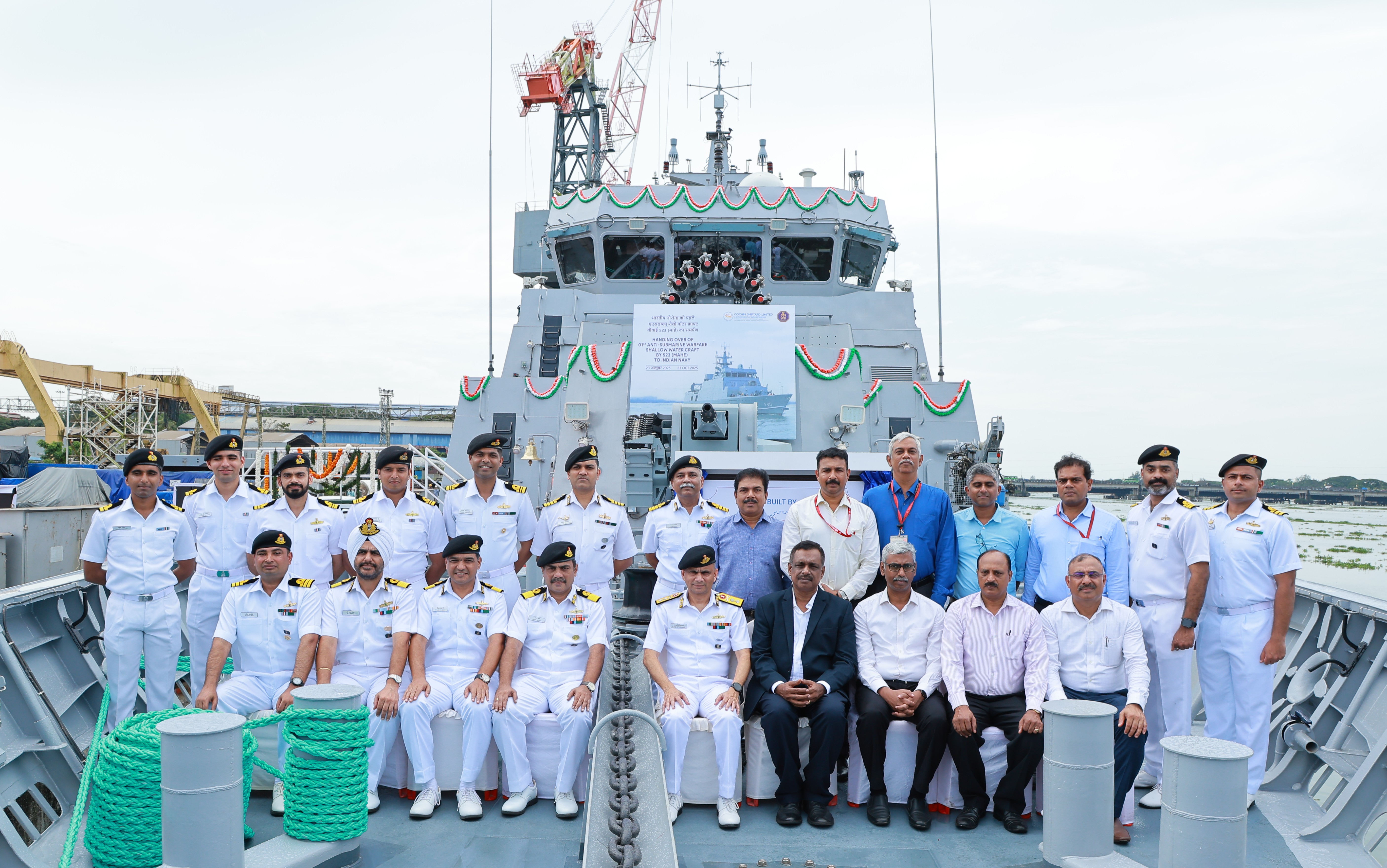
- 27 Oct 2025
In News:
The Indian Navy has recently received ‘Mahe’, the first of eight Anti-Submarine Warfare Shallow Water Crafts (ASW SWCs), built indigenously by Cochin Shipyard Limited (CSL), Kochi. The induction marks a major step towards bolstering India’s littoral (coastal) defence capabilities and advancing the vision of Aatmanirbhar Bharat in naval shipbuilding.
About Mahe – ASW Shallow Water Craft
- Builder: Cochin Shipyard Limited (CSL), Kochi
- Delivered to: Indian Navy
- Named after:Mahe, a historic port town in the Union Territory of Puducherry, symbolizing India’s rich maritime heritage.
- Classification: Designed and constructed under the rules of Det Norske Veritas (DNV) classification society.
- Displacement: Around 1,100 tons
- Length: Approximately 78 metres
- Indigenous Content: Over 80%, showcasing India’s growing self-reliance in naval design and shipbuilding.
Design and Features
- Advanced Warfare Capabilities
- Equipped with torpedoes and multi-functional anti-submarine rockets.
- Integrated radar and sonar systems for precise detection and engagement of underwater threats.
- Designed for Anti-Submarine Warfare (ASW) operations in shallow coastal waters.
- Operational Flexibility
- Capable of underwater surveillance, mine-laying operations, and Low Intensity Maritime Operations (LIMO).
- Suitable for coastal defence, escort missions, and search and rescue operations in littoral zones.
- Sustainability and Efficiency
- Compact yet powerful platform for quick maneuverability in shallow regions.
- Built using modern shipbuilding technologies, ensuring durability, stealth, and operational efficiency.
Strategic Significance
- Enhancing ASW Capabilities:The induction of Mahe will significantly strengthen India’s anti-submarine warfare capacity in coastal waters, enabling faster response to sub-surface threats from enemy submarines or unmanned underwater vehicles.
- Maritime Security:Strengthens surveillance and security along India’s vast 7,500 km coastline, ensuring greater control over sea lines of communication (SLOCs) and exclusive economic zones (EEZs).
- Boost to Aatmanirbhar Bharat:The vessel, with more than 80% indigenous components, reflects the Make in India initiative’s success in the defence manufacturing sector. It reinforces India’s ambition to be a net security provider in the Indian Ocean Region (IOR).
- Support to Blue Water Aspirations:While designed for shallow waters, the ASW SWC fleet complements India’s blue-water naval capability by securing coastal zones — the first line of maritime defence.
About Cochin Shipyard Limited (CSL)
- Established: 1972
- Location: Kochi, Kerala
- Ownership: Under the Ministry of Ports, Shipping, and Waterways
- CSL has emerged as one of India’s premier shipbuilding and repair facilities, with successful projects like:
- INS Vikrant (India’s first indigenous aircraft carrier)
- ASW Shallow Water Craft series
Project Arunank
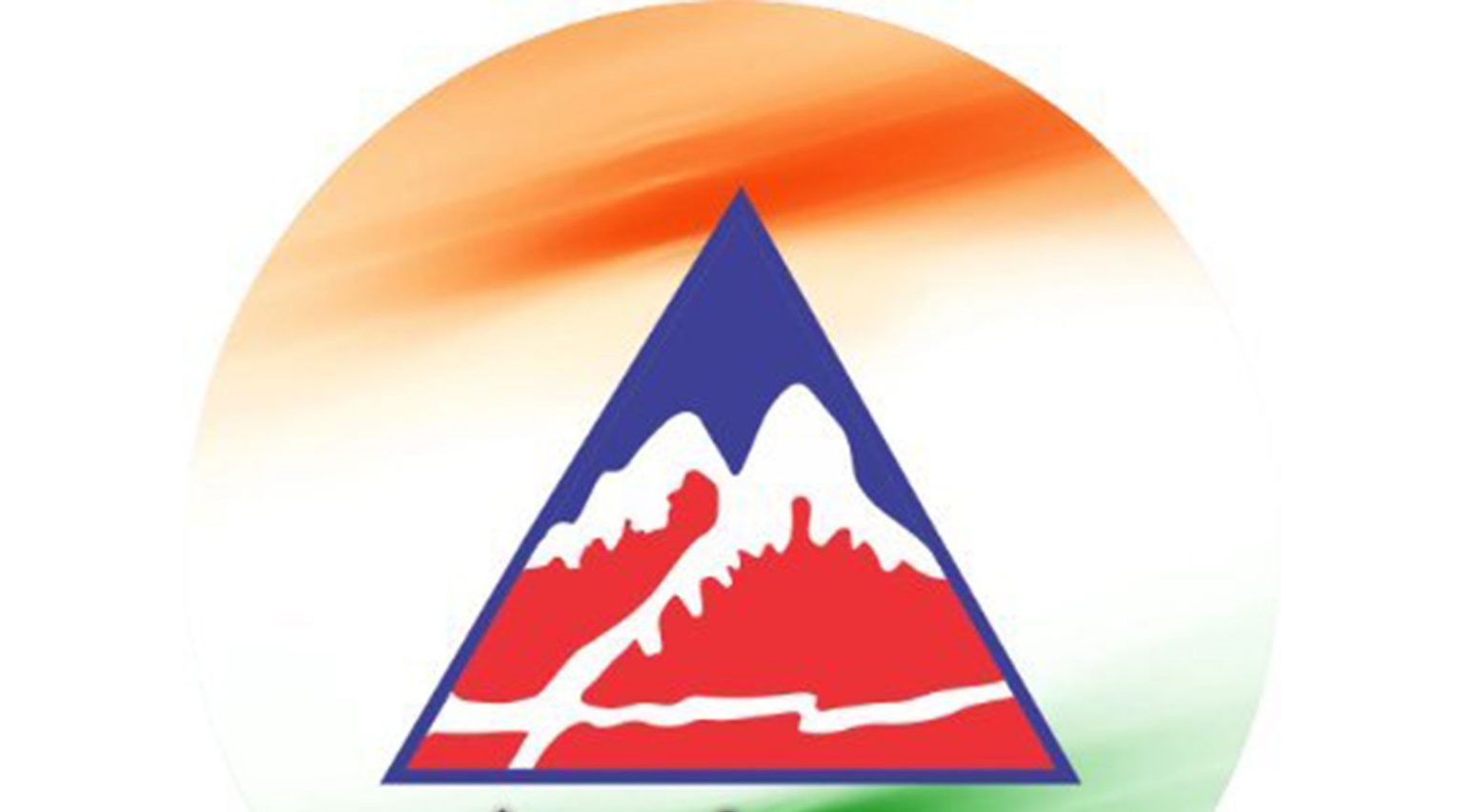
- 27 Oct 2025
In News:
Project Arunank of the Border Roads Organisation (BRO) recently celebrated its 18th Raising Day at Naharlagun, marking over 17 years of sustained infrastructure development in Arunachal Pradesh’s remote and strategic regions.
About Project Arunank
- Launched: 2008
- Implementing Agency: Border Roads Organisation (BRO), under the Ministry of Defence.
- Name Origin: Derived from the state’s name — Arunachal Pradesh.
- Objective:To enhance road connectivity in remote valleys and forward areas of Arunachal Pradesh, supporting both civilian access and the operational needs of the Indian Armed Forces.
Key Achievements
- Strategic Road Development
- Constructed and maintained over 696 km of roads and 1.18 km of major bridges across the state.
- Completed the 278 km Hapoli–Sarli–Huri Road, which was blacktopped for the first time since Independence, connecting the remote KurungKumey district — a major milestone in post-Independence connectivity.
- Technological Innovations
- Adopted modern and sustainable construction technologies, including:
- Steel Slag and GGBFS Concrete for durability.
- Cut-and-Cover Tunnels and Geo Cells for terrain stability.
- Plastic Sheets, Gabion Walls, and Slope Stabilisation Systems to prevent landslides and improve road resilience.
- These innovations promote eco-friendly and climate-resilient infrastructure in fragile Himalayan terrain.
- Adopted modern and sustainable construction technologies, including:
- Green and Welfare Initiatives
- Under the ‘Ek Ped MaaKe Naam’ campaign, over 23,850 trees were planted across Arunachal Pradesh to promote environmental conservation.
- Welfare measures for Casual Paid Labourers (CPLs) included better shelters, protective gear, and regular health camps—acknowledging their crucial contribution to BRO’s success.
- Community and Awareness Programs: Conducted a motorable expedition along the Naharlagun–Joram Top–Sangram–Ziro–Naharlagun route to promote road safety and connectivity awareness among locals and officials.
Future Plans
- Focus on road widening, construction of new bridges and tunnels, and improving all-weather, high-altitude connectivity for both civilian and defence use.
- Integration of digital monitoring tools, geotextiles, and eco-friendly materials to enhance infrastructure sustainability while reducing maintenance costs.
About the Border Roads Organisation (BRO)
- Established: 7 May 1960
- Parent Ministry: Ministry of Defence
- Mandate:To construct and maintain road networks in border areas of India and in friendly neighbouring countries to ensure defence preparedness and socio-economic development.
- The BRO has been pivotal in strategic connectivity across northern and northeastern India, including projects like Arunank (Arunachal Pradesh), Vartak (Assam & Arunachal), Himank (Ladakh), and Sampark (Jammu & Kashmir).
Duty-Free Tariff Preference (DFTP) Scheme

- 27 Oct 2025
In News:
The World Trade Organization (WTO) has recently credited India’s Duty-Free Tariff Preference (DFTP) Scheme for significantly boosting exports from Least Developed Countries (LDCs). India has surpassed China and the European Union (EU) in providing duty-free market access to the world’s poorest economies, strengthening South-South trade cooperation.
About the DFTP Scheme
- Launched: 2008
- Implementing Agency: Ministry of Commerce and Industry, Government of India
- Framework: In line with the WTO’s Hong Kong Ministerial Declaration (2005), which encouraged developed and developing members to provide duty-free and quota-free (DFQF) market access to LDCs.
- Objective:To promote trade-led economic growth of LDCs by granting preferential tariff concessions on their exports to India.
Key Features
- Comprehensive Duty-Free Access
- Provides duty-free or preferential tariff access to a large range of products exported from LDCs to India.
- Nearly 98% of India’s tariff lines are now covered under the scheme.
- Eligible Countries
- Open to all LDCs recognized by the United Nations.
- Currently, around 48 countries in Africa, Asia, and the Pacific benefit from it.
- Product Coverage
- Agricultural goods: Fruits, vegetables, grains, spices, coffee, and tea.
- Textiles & garments: Clothing, fabrics, and handwoven textiles.
- Leather & handicrafts: Bags, jewelry, and artisan products.
- Minerals & metals: Including raw materials like gold and diamonds.
- Processed foods and beverages: Key export commodities for African and Asian LDCs.
- Trade Facilitation: Simplified customs procedures and transparent rules of origin help integrate LDC exporters into global value chains (GVCs).
Recent WTO Recognition
According to the WTO, India now provides one of the widest duty-free market access schemes among developing economies—outperforming China and the EU in terms of product and tariff-line coverage.
This initiative has:
- Enhanced export diversification in LDCs.
- Strengthened India’s trade and diplomatic engagement with Africa and other developing regions.
- Supported inclusive global trade, aligning with the UN Sustainable Development Goals (SDG 17: Partnerships for the Goals).
Significance
- For LDCs: Encourages industrial growth, employment, and export competitiveness.
- For India: Reinforces its image as a responsible development partner and a leader in South-South cooperation.
- For Global Trade: Promotes equity by integrating vulnerable economies into mainstream trade flows.
Laser Interferometer Space Antenna (LISA) Mission

- 26 Oct 2025
In News:
The Laser Interferometer Space Antenna (LISA) is a joint mission of the European Space Agency (ESA) and NASA, scheduled for launch in the mid-2030s. It represents the first-ever space-based observatory designed to detect gravitational waves, offering an unprecedented opportunity to study some of the most energetic and mysterious phenomena in the universe.
Mission Objective
LISA aims to:
- Directly detect and study gravitational waves—minute ripples in spacetime caused by massive cosmic events such as black hole mergers, neutron star collisions, and possibly phenomena from the early universe.
- Explore the fundamental nature of gravity and black holes, providing insights into Einstein’s General Theory of Relativity.
- Investigate cosmic evolution by probing how galaxies and black holes have grown and interacted over time.
- Contribute to understanding the universe’s expansion rate, complementing other cosmological observations.
Design and Configuration
- The LISA system will consist of three identical spacecraft, positioned in an equilateral triangular formation.
- Each side of this triangle will span approximately 2.5 million kilometres, and the formation will trail Earth in its orbit around the Sun at a distance of about 50 million kilometres.
- This configuration will enable ultra-precise measurements of tiny variations in distance between the spacecraft caused by passing gravitational waves.
Scientific Principle
- Each spacecraft will contain two free-floating test masses (gold-platinum cubes) that serve as nearly perfect reference points in space.
- Laser beams exchanged between the spacecraft will measure the relative distance between these cubes with extraordinary accuracy using laser interferometry.
- As gravitational waves pass through, they will slightly alter the distances between the spacecraft—by as little as a fraction of the width of an atom—allowing LISA to record and analyse these distortions.
Technological Significance
- LISA extends the capabilities of ground-based detectors like LIGO and VIRGO, which can only detect higher-frequency gravitational waves.
- By operating in space, LISA can sense low-frequency gravitational waves generated by supermassive black hole binaries and other massive cosmic systems, which are beyond the reach of terrestrial observatories.
- The mission will also test cutting-edge technologies in laser stability, drag-free navigation, and precision metrology.
Scientific Impact
- Enhance understanding of black hole dynamics, galaxy formation, and cosmic structure evolution.
- Provide new data on extreme astrophysical events and test the limits of General Relativity.
- Contribute to multi-messenger astronomy, linking gravitational wave observations with electromagnetic and particle signals from the same sources.
- Offer valuable inputs for cosmology, including studies of dark matter, dark energy, and the early universe.
Japan–India Maritime Exercise (JAIMEX) 2025

- 26 Oct 2025
In News:
The Indian Naval Ship (INS) Sahyadri, an indigenously built Shivalik-class guided missile stealth frigate, participated in the Japan–India Maritime Exercise (JAIMEX-25).
About JAIMEX 2025
- Nature of Exercise: JAIMEX is a bilateral maritime exercise conducted between the Indian Navy (IN) and the Japan Maritime Self-Defense Force (JMSDF).
- Objective: It aims to enhance operational interoperability, mutual understanding, and maritime cooperation, reflecting the robust ‘Special Strategic and Global Partnership’ established between India and Japan in 2014.
- Theme: Upholding a free, open, and inclusive Indo-Pacific based on the principles of rules-based order, freedom of navigation, and shared maritime security.
Exercise Structure
JAIMEX 2025 was conducted in two distinct phases — the Sea Phase and the Harbour Phase, each designed to deepen operational synergy and people-to-people interaction between the two navies.
1. Sea Phase:
- Participating vessels included INS Sahyadri, and JMSDF ships Asahi, Oumi, and Submarine Jinryu.
- The drills focused on:
- Advanced Anti-Submarine Warfare (ASW)andmissile defence operations.
- Flying operationsandunderway replenishmentexercises.
- Maritime domain awareness and communication interoperability.
- These activities aimed to enhance tactical coordination, build mutual trust, and improve joint operational readiness between the two navies.
2. Harbour Phase (Yokosuka, Japan)
- Featured professional and cultural exchanges, including:
- Cross-deck visits,
- Collaborative operational planning,
- Sharing of best practices, and
- A combined Yoga session to promote cultural camaraderie.
- The harbour engagement served as a part of INS Sahyadri’s Long Range Deployment (LRD) to the Indo-Pacific, reflecting India’s increasing maritime outreach and strategic presence in the region.
Significance of JAIMEX
- Strengthens Maritime Cooperation: Enhances India–Japan naval interoperability, crucial for coordinated responses to maritime security challenges such as piracy, illegal fishing, and humanitarian assistance.
- Supports the Indo-Pacific Vision: Reinforces the shared commitment to a rules-based maritime order and an inclusive Indo-Pacific, aligning with initiatives like QUAD and Indo-Pacific Oceans Initiative (IPOI).
- Boosts Defence Diplomacy: Builds mutual trust and operational understanding through regular bilateral and multilateral engagements.
- Showcases India’s Indigenous Naval Capability: INS Sahyadri’s participation underscores India’s progress under ‘Aatmanirbhar Bharat’ and its ability to deploy advanced indigenous platforms for extended missions.
INS Sahyadri: Key Facts
|
Feature |
Description |
|
Class & Type |
Shivalik-class Guided Missile Stealth Frigate |
|
Commissioned |
2012 |
|
Built by |
Mazagon Dock Shipbuilders Ltd, Mumbai |
|
Missile Systems |
Barak-1, Shtil-1 (3S90M) SAMs, BrahMos anti-ship missiles |
|
Other Armaments |
Anti-submarine rocket launchers and torpedoes |
|
Capabilities |
Multi-role stealth platform for surface, anti-air, and anti-submarine warfare |
|
Previous Deployments |
Multiple bilateral and multilateral exercises across the Indo-Pacific |
India–Japan Defence and Strategic Cooperation
The India–Japan defence partnership has become a key component of their broader Special Strategic and Global Partnership (2014), rooted in shared democratic values and converging strategic interests in the Indo-Pacific.
Major Bilateral and Multilateral Defence Engagements:
- Malabar Exercise – Multilateral naval exercise (India, Japan, USA, Australia).
- Dharma Guardian – Bilateral Army exercise.
- Veer Guardian – Bilateral Air Force exercise.
- 2+2 Ministerial Dialogue – Institutional mechanism for strategic coordination.
These engagements collectively strengthen maritime domain awareness, supply chain resilience, and defence technology cooperation between the two nations.
Strategic Context
- The JAIMEX exercise aligns with India’s Act East Policy and Japan’s Free and Open Indo-Pacific (FOIP) vision.
- It demonstrates a collective response to maritime challenges such as increasing militarization, territorial disputes, and climate-driven risks in the Indo-Pacific.
- The partnership complements India’s engagement in regional groupings such as the QUAD, ASEAN-led mechanisms, and IORA (Indian Ocean Rim Association).
UN’s Early Warnings for All (EW4All) Initiative
- 26 Oct 2025
In News:
The World Meteorological Organization (WMO), at its Extraordinary Congress in Geneva (October 2025), rallied its 193 Member States to commit to achieving universal early warning coverage by 2027 under the United Nations’ Early Warnings for All (EW4All) initiative. This global “Call to Action” seeks to ensure that no one dies for lack of warning in the face of intensifying weather, water, and climate-related disasters.
About Early Warning Systems (EWS)
An Early Warning System (EWS) is an integrated mechanism that combines:
- Hazard monitoring and forecasting,
- Disaster risk assessment,
- Communication of alerts, and
- Preparednessmeasures,to enable timely action that saves lives, livelihoods, and assets.
According to the WMO, a 24-hour advance warning can reduce disaster-related damage by up to 30%, underscoring the importance of predictive and community-based alert systems.
UN’s Early Warnings for All (EW4All) Initiative
- Launched: 2022 by UN Secretary-General António Guterres.
- Lead Agencies:
- World Meteorological Organization (WMO)
- UN Office for Disaster Risk Reduction (UNDRR)
- International Telecommunication Union (ITU)
- International Federation of Red Cross and Red Crescent Societies (IFRC)
- Goal: To ensure that every person on Earth is protected by life-saving early warnings for hazards such as cyclones, floods, droughts, and heatwaves by 2027.
- Philosophy: “Every dollar invested in early warnings saves up to fifteen dollars in avoided losses.”
The Early Warning “Value Chain”
The EW4All initiative emphasizes strengthening each link of the early warning value chain:
- Monitoring and Forecasting: Building accurate, real-time climate and hazard observation networks.
- Risk Assessment: Identifying vulnerable populations and areas through integrated risk mapping.
- Alert Dissemination: Delivering clear, trusted, and accessible alerts using multi-platform communication (digital, radio, community-based).
- Preparedness and Response: Ensuring communities understand warnings and act effectively.
Global Need and Rationale
- Over the past 50 years, climate, weather, and water-related disasters have claimed over 2 million lives, with 90% of deaths occurring in developing nations.
- Since 1970, economic losses from such disasters have exceeded US$4 trillion globally.
- Countries lacking multi-hazard early warning systems experience six times higher mortality and four times greater impacts than those equipped with such systems.
Current Global Status
- As of 2024, 108 countries have some capacity for multi-hazard early warning systems, up from 52 countries in 2014.
- However, Least Developed Countries (LDCs), Small Island Developing States (SIDS), and conflict-affected regions remain severely underprotected.
- A WMO assessment across 62 countries revealed:
- 50% have only basic hazard monitoring capacity.
- 16% have less than basic capacity.
- Technical barriers include:
- Weak observation networks,
- Limited data sharing,
- Inadequate financing, and
- Lack of community trust and awareness.
Progress Under EW4All
The WMO’s 2025 Congress marked a turning point as 193 nations endorsed a Call to Action for universal coverage by 2027.Key outcomes include:
- Country-led assessments and roadmaps for capacity building.
- Integration of EW4All targets with the Sendai Framework for Disaster Risk Reduction (2015–2030).
- Strengthened regional cooperation for hazard data sharing and early action.
- New partnerships between national meteorological services, private sector innovators, and humanitarian agencies.
Call to Action: Priority Measures
To meet the 2027 universal coverage target, WMO and the UN have urged governments to:
- Integrate EWS into national climate and disaster management policies.
- Secure long-term and predictable financing beyond short-term project aid.
- Empower National Meteorological and Hydrological Services (NMHSs) with clear mandates and authority.
- Ensure inclusivity by combining scientific data with indigenous knowledge to reach vulnerable and remote communities.
- Leverage innovation and AI to enhance the precision and speed of predictions.
- Promote open data sharing and capacity-building to close technological gaps.
Regional Implications for India
India, as one of the most climate-vulnerable nations facing monsoons, cyclones, and heatwaves, stands to benefit immensely from EW4All.
- India already operates a robust multi-hazard early warning system led by the India Meteorological Department (IMD), NDMA, and INCOIS.
- Integration under EW4All could help upgrade radar networks, enhance last-mile connectivity, and strengthen community-based disaster response.
- The initiative aligns with India’s National Disaster Management Plan (NDMP) and Sendai Framework priorities, reinforcing the “Zero Casualty” approach in disaster management.
Deendayal Antyodaya Yojana – National Rural Livelihoods Mission (DAY-NRLM)
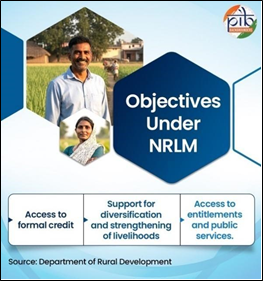
- 26 Oct 2025
In News:
The Deendayal Antyodaya Yojana – National Rural Livelihoods Mission (DAY-NRLM), implemented by the Ministry of Rural Development (MoRD), stands as one of the world’s largest poverty alleviation and women-centric livelihood programmes. It has successfully mobilized millions of rural households into community institutions and significantly advanced the agenda of women’s empowerment, financial inclusion, and sustainable rural livelihoods.
Genesis and Evolution
- Launch: Initially introduced in 2010 as the National Rural Livelihoods Mission (NRLM) by restructuring the Swarnajayanti Gram Swarozgar Yojana (SGSY).
- Renaming: In 2016, it was renamed Deendayal Antyodaya Yojana – National Rural Livelihoods Mission (DAY-NRLM) to honour the philosophy of Antyodaya—uplifting the poorest of the poor.
- Funding Pattern: It is a Centrally Sponsored Scheme, jointly funded by the Central and State Governments.
- Objective: To reduce rural poverty by enabling poor households to access self-employment and skilled wage employment opportunities, ensuring diversified and sustainable livelihoods.
Core Objectives
The mission seeks to empower rural communities by investing in four key pillars:
- Social Mobilisation& Institution Building: Organizing rural poor, especially women, into Self-Help Groups (SHGs) and federations for mutual support and long-term empowerment.
- Financial Inclusion: Ensuring access to formal credit and financial services through community-based intermediaries like Bank Sakhis and Banking Correspondent Sakhis.
- Sustainable Livelihoods: Promoting both farm and non-farm livelihoods including agriculture, livestock, handicrafts, and microenterprises.
- Social Development & Convergence: Addressing gender, nutrition, health, sanitation, and social justice through convergence with other government programmes.
Women-Centric Model
Women are at the heart of DAY-NRLM. The mission focuses on collectivizing women into SHGs, enhancing their entrepreneurial capacity, and connecting them to markets, technology, and credit networks.
- Scale: As of June 2025, the mission has mobilized 10.05 crore rural households into 90.9 lakh SHGs across 28 States and 6 UTs.
- Financial Empowerment: Over ?11 lakh crore has been disbursed to SHGs through formal banking systems, backed by collateral-free loans and interest subvention, with a 98% repayment rate — a testament to the model’s sustainability.
- Community Cadres: SHG women are trained as Community Resource Persons (CRPs) such as
- Krishi Sakhis – agricultural extension support,
- PashuSakhis – animal health and livestock management,
- Bank Sakhis – financial inclusion facilitators,
- BimaSakhis – insurance and welfare access agents.
- Over 3.5 lakh Krishi and PashuSakhis and 47,952 Bank Sakhis have been deployed to deliver last-mile services.
Entrepreneurship and Microenterprise Development
To promote local entrepreneurship, the Mission runs the Start-up Village Entrepreneurship Programme (SVEP), supporting 3.74 lakh rural enterprises across 282 blocks.
These enterprises cover diverse sectors like handicrafts, food processing, agro-based units, and rural services — encouraging self-reliance and community-led growth.
A remarkable example is of Heinidamanki Kanai from Meghalaya, who turned her SHG training into a successful handmade soap business with bank support under NRLM — a model of grassroots entrepreneurship.
Skill Development and Employment Initiatives
DAY-NRLM implements two major Centrally Sponsored Schemes to boost rural employability and entrepreneurship:
- DeenDayal Upadhyaya Grameen Kaushalya Yojana (DDU-GKY)
- Provides placement-linked skill training for rural youth aged 15–35 years.
- 17.50 lakh trained and 11.48 lakh placed as of June 2025.
- Top-performing states: Uttar Pradesh, Odisha, and Andhra Pradesh.
- Rural Self Employment Training Institutes (RSETIs)
- Bank-sponsored centres for youth aged 18–50 years, providing entrepreneurship training and promoting both self- and wage-employment.
- 56.69 lakh candidates trained,40.99 lakh settled in gainful employment.
- Leading states: Uttar Pradesh, Rajasthan, Madhya Pradesh, and Karnataka.
Achievements and Outcomes
High-Performing States:
- Bihar, Uttar Pradesh, Andhra Pradesh (SHG formation and financial inclusion).
- Maharashtra, Uttar Pradesh, Andhra Pradesh (agro-ecological initiatives under MahilaKisanprogrammes).
- Assam, Kerala, and West Bengal (microenterprise promotion under SVEP).
Capacity Building and Marketing Initiatives
To strengthen entrepreneurship and market readiness:
- SARAS Aajeevika Melas (National & State-level fairs) are organized annually to showcase SHG products and build marketing skills.
- The National Institute of Rural Development and Panchayati Raj (NIRD&PR) conducts Training of Trainers (ToT)programmes on marketing, having trained over 44 batches in the past three years.
- These initiatives bridge rural producers with urban consumers and e-commerce platforms, enhancing rural incomes.
Impact on Rural Transformation
- Economic Empowerment: Enhanced access to credit and markets has diversified income sources for millions of women.
- Social Transformation: SHG networks now play a role in local governance, social awareness, and addressing gender issues such as domestic violence, health, and education.
- Financial Inclusion: The presence of SHG-led financial intermediaries ensures doorstep access to savings, credit, and insurance.
- Sustainable Livelihoods:Agro-ecological practices, livestock management, and non-farm enterprises are reducing ecological stress and enhancing resilience.
Challenges Ahead
- Uneven implementation across states and regions.
- Need for stronger digital monitoring and credit tracking.
- Enhancing market linkages for SHG products.
- Integrating livelihood programmes with emerging green and climate-resilient models.
Conclusion
The Deendayal Antyodaya Yojana – National Rural Livelihoods Mission (DAY-NRLM) exemplifies inclusive, women-led rural development. By mobilizing millions of women into strong community institutions, linking them with finance and skills, and promoting sustainable livelihoods, it has transformed the socio-economic fabric of rural India.
As a global model of community-driven development, the Mission continues to advance India’s vision of “Atmanirbhar Bharat” by empowering its most vulnerable citizens to become entrepreneurs, leaders, and change-makers in their own right.
Forest Rights Act (FRA), 2006
- 26 Oct 2025
In News:
The Central Government has strongly defended the Forest Rights Act (FRA), 2006 before the Supreme Court, asserting that the law plays a transformative role in restoring the dignity, livelihoods, and cultural identity of India’s forest-dependent communities. The Ministry of Tribal Affairs (MoTA), in its affidavit, has rebutted allegations that the FRA or its 2012 Rules conflict with existing wildlife and forest protection laws.
Background
- The Forest Rights Act was enacted in 2006 to correct historical injustices faced by Scheduled Tribes (STs) and Other Traditional Forest Dwellers (OTFDs), whose rights over forest lands were never formally recorded.
- The Act’s constitutional validity was challenged in 2008 by the NGO Wildlife First, which sought eviction of people whose claims were rejected under the Act.
- In February 2019, the Supreme Court directed states to evict rejected claimants, triggering widespread protests from tribal groups and civil society.
- The MoTA intervened, pointing to procedural lapses in claim verification, leading the Court to stay the eviction order and call for fresh data and review of rejected claims.
Government’s Stand Before the Supreme Court
- The MoTA has upheld both the legal validity and spirit of the Act, clarifying that FRA is not merely about land ownership but about restoring dignity, livelihoods, and cultural identity.
- The Ministry has rebutted claims that FRA undermines wildlife or forest conservation, arguing that the coexistence model has long been practiced by indigenous groups such as the Baiga and Santhal communities.
- The Centre has emphasized that the absence of a sunset clause in the Act is intentional to ensure equity and prevent arbitrary timelines for claim submissions.
- It also highlighted that the Gram Sabha is the final authority in determining forest rights, as reaffirmed by the 2013 Niyamgiri judgment, which upheld the community and cultural rights of the DongriaKondh tribe in Odisha.
Key Provisions of the FRA, 2006
The Act recognises two broad categories of rights:
- Individual Forest Rights (IFR): Ownership and habitation rights for forest land cultivated or occupied by individuals or families.
- Community Forest Rights (CFR): Rights of communities over forest resources, including grazing, fishing, and collection of Minor Forest Produce (MFP) like bamboo, tendu leaves, honey, lac, and wax.
Empowerment of Gram Sabha:
- To identify, verify, and recommend claims for forest rights.
- To manage and protect community forest resources sustainably.
- To regulate access to and trade of MFP, ensuring benefits reach local communities directly.
Government Initiatives Supporting FRA Implementation
- The Minimum Support Price (MSP) scheme for Minor Forest Produce ensures fair value for tribal collectors.
- The Tribal Cooperative Marketing Development Federation (TRIFED) and Van DhanKendras assist tribal communities in value addition and marketing of forest products.
- These mechanisms prevent the monopolisation of forest produce by contractors and enhance economic self-reliance among tribal communities.
Key Issues and Challenges
- Implementation Delays: Many claims remain pending due to administrative inefficiencies and lack of trained personnel at local levels.
- Conflict with Conservation Laws: Overlaps with the Wildlife Protection Act (1972) and Forest Conservation Act (1980) often lead to confusion and litigation.
- Commercialization Risks: Concerns exist over unsupervised extraction of MFP if monitoring is weak.
- Data and Monitoring Gaps: Lack of digitized and transparent claim records has led to disputes and wrongful rejections.
- Integration with Conservation Goals: Balancing livelihood rights with ecological preservation remains a challenge.
Significance of FRA
- Empowers tribal and forest communities by recognizing their traditional rights and promoting participatory forest governance.
- Strengthens decentralized decision-making through Gram Sabhas.
- Promotes poverty reduction and sustainable livelihoods.
- Reinforces constitutional principles, notably:
- Article 21 – Right to Life with dignity.
- Article 46 – Promotion of educational and economic interests of Scheduled Tribes.
- Advances the philosophy of “Conservation through Coexistence”, integrating ecological and social sustainability.
FAO’s Global Forest Resources Assessment 2025
- 25 Oct 2025
In News:
India has moved up to the 9th position globally in total forest area, according to the Global Forest Resources Assessment (GFRA) 2025, released by the Food and Agriculture Organization (FAO) in Bali. The report reflects India’s steady progress in forest conservation, afforestation, and sustainable land management.
About the Global Forest Resources Assessment (GFRA)
- Published by: Food and Agriculture Organization (FAO) of the United Nations
- Frequency: Every five years
- Objective: To provide comprehensive data on the world’s forests, covering their extent, condition, management, and use.
- 2025 Theme: Strengthening forest resilience for sustainable development.
Global Findings (GFRA 2025)
- Total global forest cover:4.14 billion hectares, accounting for 32% of the Earth’s land area, equivalent to 0.5 hectares per person.
- Top 10 countries by forest area:Russia, Brazil, Canada, USA, China, Democratic Republic of the Congo, Australia, Indonesia, India, and Peru.
- Deforestation trends:Global deforestation has slowed in the past decade, but the world continues to lose about 10.9 million hectares of forest annually (2015–2025)—a rate still considered alarming.
India’s Forest Status and Achievements
- Total forest cover:72.7 million hectares, accounting for about 2% of global forest area.
- Global ranking:
- 9th in total forest area (up from 10th position in the previous assessment).
- 3rd in annual forest area gain, after China and Russia, highlighting successful afforestation initiatives.
- Agroforestry Leadership:India and Indonesia together contribute over 70% of the world’s agroforestry areas, reflecting strong integration of trees in farmlands.
Significance of India’s Achievement
- Climate Change Mitigation:Expanding forest area enhances carbon sequestration, supporting India’s Nationally Determined Contributions (NDCs) under the Paris Agreement.
- Biodiversity Conservation:Forests serve as habitats for India’s rich flora and fauna, aiding ecosystem balance and wildlife protection.
- Livelihood and Socioeconomic Support:Around 275 million people in India depend on forests for subsistence, employment, and traditional livelihoods.
- Land and Water Security:Forests play a crucial role in soil conservation, groundwater recharge, and regulating hydrological cycles, particularly in fragile ecosystems.
- Global Commitments:Aligns with India’s obligations under the UN Decade on Ecosystem Restoration (2021–2030) and Sustainable Development Goal 15 (Life on Land).
Government Initiatives Driving Forest Growth
- Ek Ped MaaKe Naam Campaign:A nationwide movement encouraging citizens to plant trees in honor of their mothers, fostering personal and cultural ties to environmental conservation.
- National Mission for a Green India (GIM):A key component of the National Action Plan on Climate Change (NAPCC), targeting increased forest cover and improved forest quality to enhance carbon sinks.
- Compensatory Afforestation Fund Act, 2016 (CAMPA):Mandates compensatory levies for diversion of forest land for non-forest purposes and channels these funds into afforestation and eco-restoration activities.
- Eco-Sensitive Zones (ESZs):Buffer zones around Protected Areas, National Parks, and Wildlife Sanctuaries to limit harmful anthropogenic activities and protect ecological integrity.
- Joint Forest Management (JFM):Promotes community participation in forest conservation and regeneration by forming partnerships between local communities and forest departments.
OpenAI Launches AI Browser ‘Atlas’
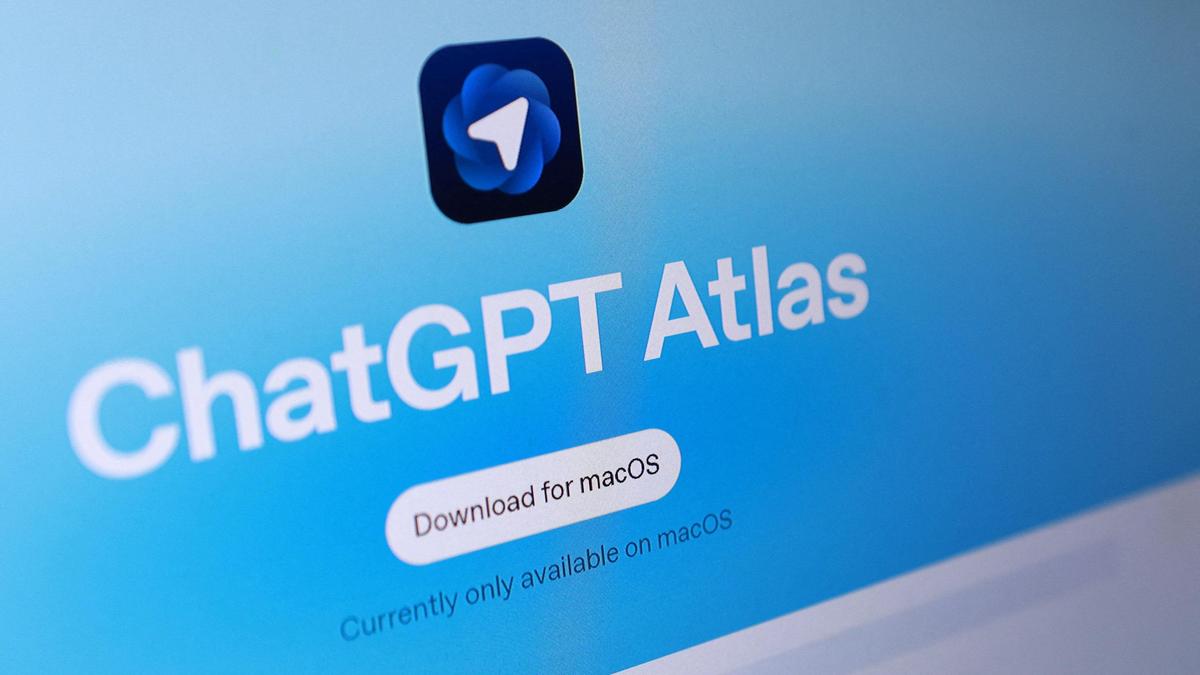
- 25 Oct 2025
In News:
OpenAI has unveiled ‘Atlas’, its new AI-powered web browser built around ChatGPT, marking a significant step in the evolving generative AI competition and posing a direct challenge to Google Chrome’s dominance. The move comes soon after Perplexity AI introduced its own AI-integrated browser, Comet, underscoring a major transformation in how users interact with the internet.
About Atlas
- Developer:OpenAI
- Nature: AI-integrated web browser built around ChatGPT
- Availability: Currently in preview mode for ChatGPT Plus, Pro, and Business users.
- Design: Atlas removes the traditional address bar, replacing it with a conversational AI interface.
- Key Feature – Agent Mode:
- Enables the browser to autonomously perform searches, analyze sources, and synthesize information into concise summaries.
- Allows users to ask questions in natural language instead of typing web addresses or search keywords.
The browser seamlessly combines web navigation and AI interaction, positioning itself as the next step in AI-mediated online browsing.
Why AI Companies Are Building Browsers
- Control Over User Interface and Data:Browsers act as the gateway to most online activities—search, shopping, finance, entertainment, and social media. Controlling this entry point enables AI companies to own user intent, data, and engagement patterns.
- Monetization Potential:Like Google’s ad-based model, AI browsers can monetize user activity and queries by integrating AI-generated recommendations and sponsored content.
- Integrated AI Experience:AI browsers embed conversational AI tools directly into familiar interfaces, bridging the gap between chatbots and traditional search engines.
- Strategic Advantage:By embedding AI assistants within browsers, companies like OpenAI and Perplexity can reduce dependence on traditional search engines (notably Google), reshaping the competitive dynamics of the internet ecosystem.
How AI Browsers Are Transforming Search
- Traditional Search Model:Relies on keyword-based queries returning multiple hyperlinks for users to navigate.
- AI-Powered Search Model (Atlas & Comet):
- Delivers direct, synthesized, and contextually relevant answers instead of a list of links.
- Suggests related prompts for deeper exploration and learning.
- Adapts to individual user preferences, creating personalized information journeys.
This shift reduces dependence on link-based navigation, potentially disrupting traditional search traffic and publisher visibility models.
Broader Implications
- For Users:
- Offers faster, personalized, and conversational search experiences.
- Transforms passive browsing into interactive discovery.
- For the Digital Ecosystem:
- Challenges Google’s dominance in search and browser markets.
- Raises new debates on data privacy, content attribution, and information accuracy.
- Could reshape digital advertising, as traffic shifts from web pages to AI-generated summaries.
- For the AI Industry:
- Signals a new phase of competition between leading AI firms like OpenAI, Google, and Perplexity.
- Marks a trend towards AI-integrated ecosystems where chatbots, browsers, and search engines converge.
Sevilla Forum on Debt
- 25 Oct 2025
In News:
At the 16th United Nations Conference on Trade and Development (UNCTAD16) held in Geneva, the Sevilla Forum on Debt was officially launched — marking a major international step towards tackling the global sovereign debt crisis and promoting fair, sustainable debt solutions for developing economies.
About the Sevilla Forum on Debt
- Launched by: The Government of Spain, with support from UNCTAD and the UN Department of Economic and Social Affairs (UN DESA).
- Event: Announced at UNCTAD16 (October 2025) in Geneva.
- Part of: The Sevilla Platform for Action, building upon commitments made during the Fourth International Conference on Financing for Development (FfD4).
Aim and Objectives
- To create an open, inclusive, and action-oriented space for dialogue on sovereign debt reform.
- To connect all stakeholders—creditors, borrowers, multilateral institutions, civil society, and academia—towards developing innovative, fair, and sustainable debt management frameworks.
- To track and implement the debt-related initiatives agreed upon in the Sevilla Commitment, ensuring political pledges are translated into institutional mechanisms.
Context: The Global Debt Challenge
- Public debt worldwide reached $102 trillion in 2024, with developing countries accounting for $31 trillion of that burden.
- Developing nations paid around $921 billion in interest payments — surpassing their combined public spending on health and education.
- According to UNCTAD, over 3.4 billion people now live in countries where debt servicing outweighs essential social expenditure, underscoring the need for systemic reform of the global debt architecture.
Key Features of the Sevilla Forum
- Bridge Between Borrowers and Creditors:
- Acts as a neutral hub facilitating candid discussions between debtor nations and lenders.
- Encourages transparency, responsible borrowing, and fair lending practices.
- Catalyst for Global Action:
- Sustains political attention on debt-related agreements under the Sevilla Commitment.
- Supports coordinated multilateral action to ensure predictable and equitable debt governance.
- Knowledge Exchange Platform:Brings together policymakers, economists, and institutions to develop and share innovative debt management solutions, including debt-for-climate and debt-for-development swaps.
- Linked Initiatives by Spain:
- Debt Pause Clause Alliance: Promotes temporary suspension of debt payments for nations in crisis.
- Global Hub for Debt Swaps: Facilitates conversion of debt obligations into sustainable development investments.
Significance
- For Developing Countries: Offers a collective voice and platform to advocate for debt justice and reform of the global financial architecture.
- For Global Governance: Reinforces multilateralism through UN-led cooperation between creditors and borrowers.
- For Sustainable Development: Aligns with Agenda 2030 by linking debt relief with social and climate investments, particularly SDG 8 (Decent Work & Economic Growth) and SDG 17 (Partnerships for the Goals).
About UNCTAD
- Full Form: United Nations Conference on Trade and Development
- Established: 1964 by the UN General Assembly
- Headquarters: Geneva, Switzerland
- Mandate: To help developing countries leverage trade, finance, and technology for inclusive and sustainable development.
- Core Functions:
- Economic and trade analysis
- Consensus-building among nations
- Technical assistance for policy and institutional strengthening
- Major Reports:
- Trade and Development Report
- World Investment Report
- The Least Developed Countries Report
Intrusion Detection System
- 25 Oct 2025
In News:
The Northeast Frontier Railway (NFR) has successfully completed trial works of the Intrusion Detection System (IDS) across four key railway sections in Assam and West Bengal to prevent elephant fatalities due to train collisions.
About the Intrusion Detection System (IDS)
The Intrusion Detection System (IDS) is a cutting-edge initiative of the Northeast Frontier Railway (NFR) under the Ministry of Railways, aimed at protecting wildlife—particularly elephants—while ensuring smooth and efficient railway operations through forested and ecologically sensitive zones.
Objective
- To minimize elephant deaths caused by train collisions along railway lines intersecting elephant corridors.
- To balance operational efficiency with ecological conservation, aligning with India’s broader goals of sustainable infrastructure and biodiversity protection.
Technology and Working
- Technology Used: IDS employsadvanced optical fibre sensing technology installed parallel to railway tracks at a distance of around 10 metres.
- Functioning:
- The system detects vibrations generated by elephant movement near railway tracks.
- These vibrations are captured by sensor cables, which relay the data to a central control room.
- The system then generates real-time alerts for train drivers and control rooms, enabling them to take immediate preventive actions, such as slowing down or halting trains.
This real-time detection mechanism ensures timely intervention and minimizes human-wildlife conflict along railway routes.
Implementation by NFR
The Intrusion Detection System has been successfully implemented in the following pilot sections:
- Madarihat–Nagrakata section (Alipurduar Division)
- Habaipur–Lamsakhang–Patharkhola–Lumding section (Lumding Division)
- Kamakhya–Azara–Mirza section (Rangiya Division)
- Titabar–Mariani–Nakachari section (Tinsukia Division)
- Coverage:The pilot installations collectively span 64.03 km of elephant corridors and 141 km of block sections, marking a significant step in NFR’s ongoing wildlife protection efforts.
Significance
- Wildlife Protection: Helps prevent accidental elephant deaths, promoting coexistence between rail infrastructure and biodiversity.
- Operational Efficiency: Enhances train safety by providing advance alerts, reducing service disruptions.
- Technological Advancement: Demonstrates the integration of AI and fibre-optic sensing in railway operations.
- Environmental Responsibility: Reflects the government’s commitment to sustainable development goals (SDGs), particularly those related to life on land (SDG-15) and industry, innovation and infrastructure (SDG-9).
Hyunmoo-5 Missile
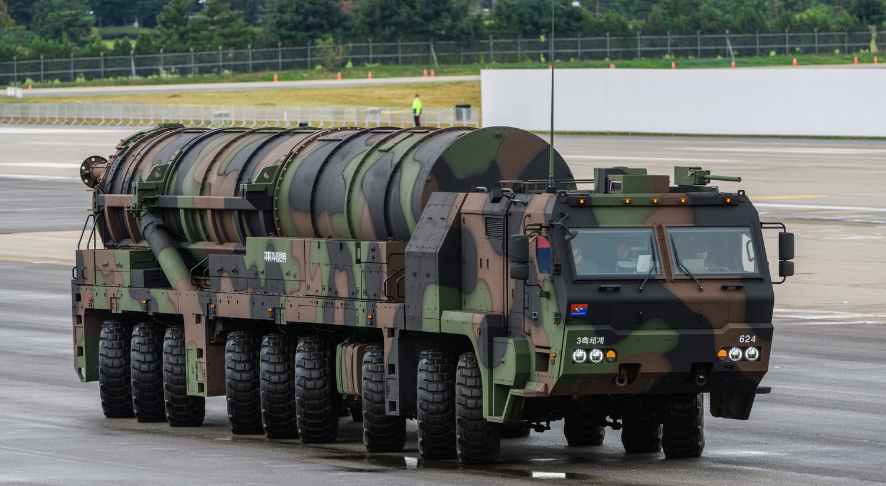
- 25 Oct 2025
In News:
South Korea is set to deploy its most powerful conventional ballistic missile, the Hyunmoo-5, by the end of this year. The move signifies a major step in Seoul’s efforts to enhance its deterrence capabilities amid escalating tensions with nuclear-armed North Korea.
Background and Development
- The Hyunmoo missile series forms the backbone of South Korea’s indigenous missile program, designed for strategic self-reliance under the constraints of the Nuclear Non-Proliferation Treaty (NPT).
- The concept of Hyunmoo-5 emerged after North Korea’s series of provocations in the early 2010s, including deadly border attacks. However, progress was limited by a bilateral missile agreement with the United States, which imposed payload and range restrictions to maintain stability on the Korean Peninsula.
- In 2017, following North Korea’s hydrogen bomb test, the Trump administration lifted these restrictions, enabling South Korea to pursue the development of high-payload, long-range conventional missiles such as Hyunmoo-5.
Technical Features of Hyunmoo-5
- Type: Ground-to-ground ballistic missile
- Weight: Approximately 36 tonnes
- Length: Around 16 metres
- Warhead Capacity: Can carry up to 8 tonnes of conventional explosive payload, including bunker-buster warheads capable of penetrating underground fortifications.
- Range: Estimated between 600 km and 5,000 km, depending on payload configuration.
- Purpose: Designed to neutralize hardened and deeply buried North Korean missile silos, command centres, and nuclear facilities.
Because South Korea does not possess nuclear weapons, the Hyunmoo-5 represents an attempt to achieve a “conventional balance of terror”—a deterrent parity based on precision and power rather than nuclear arms.
Ningol Chakouba Festival
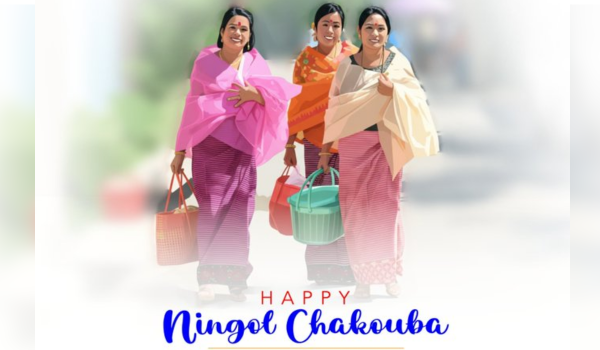
- 24 Oct 2025
In News:
- Manipur recently celebrated the Ningol Chakouba Festival, a unique cultural tradition that reinforces the bond of love between married women and their paternal families.
- As part of the annual celebrations, the Department of Fisheries, Manipur organized the Annual Fish Fair-cum-Fish Crop Competition at Hapta Kangjeibung in Imphal, a day before the festival.
- The event aims to make fish available to the public at affordable prices, as fish curry is an essential part of the festive feast.
About Ningol Chakouba Festival
- Meaning:
- Ningol – married woman (sister or daughter)
- Chakouba – feast or communal meal
Thus, Ningol Chakouba translates to “feast of married women”.
- When Celebrated:Observed annually on the second day of Hiyangei month (October–November) of the Meitei lunar calendar.
- Main Ritual:Married women and their children visit their maternal homes for a grand feast and reunion with their brothers and parents.
- The sons of the family formally invite their married sisters about a week in advance.
- Women arrive in traditional attire, bringing fruits, vegetables, and local delicacies as offerings.
- After a shared meal, brothers present gifts to their sisters as a token of love and respect.
Cultural Essence and Significance
- The festival serves as a symbol of familial unity, respect for women, and continuity of social ties even after marriage.
- It highlights the importance of kinship in Manipuri society and reinforces the bond between daughters and their parental homes.
- Beyond Manipur, the festival is now celebrated by Manipuri communities across India and abroad, preserving cultural identity among the diaspora.
Historical Background
- Origin: Traced back to the reign of King Nongda Lairen Pakhangba, one of Manipur’s earliest rulers.
- At that time, Queen Laisana used to invite her brother Poireiton to the royal palace annually for a feast—originally called “Piba Chakouba” (Piba meaning brother/son).
- Transformation:
The tradition evolved during the reign of King Chandrakirti Singh (1831–1886), who invited his sisters instead of brothers due to logistical challenges in visiting them.- Since then, the celebration became known as “Ningol Chakouba”, centered on the affection between sisters and brothers.
Associated Event: Fish Fair-cum-Fish Crop Competition
- Organized by the Department of Fisheries, Government of Manipur, every year a day before Ningol Chakouba.
- Purpose:
- Ensure easy availability of fresh fish at affordable prices for the festival.
- Promote local fish farmers and aquaculture in the state.
- Venue: Hapta Kangjeibung, Imphal.
- Cultural Link: Fish dishes, especially fish curry, are a mandatory part of the feast, symbolizing prosperity and togetherness.
Storm Shadow Missile

- 24 Oct 2025
In News:
- Ukraine has reportedly carried out a long-range missile strike on a Russian chemical plant in Bryansk using UK-made Storm Shadow cruise missiles, marking one of the most significant deep-penetration attacks into Russian territory since the beginning of the war.
- The strike, which reportedly bypassed Moscow’s air defence systems, triggered retaliatory drone and missile attacks by Russia on Ukrainian cities, including Kyiv and Dnipropetrovsk, leading to civilian casualties and power outages.
- The episode underscores the escalation in the Ukraine–Russia conflict and highlights the growing strategic role of Western-supplied precision weaponry in modern warfare.
About the Storm Shadow Missile
- Type: Long-range, air-launched stealth cruise missile
- Developed by:United Kingdom and France (known as SCALP EG in France)
- Manufacturer:MBDA Systems
- Operational Since: Early 2000s
- Primary Role: Designed to destroy high-value, well-protected targets such as:
- Airbases
- Radar installations
- Command and control centres
- Port and fuel storage facilities
The missile’s combination of low observability, precision guidance, and deep-penetration warhead makes it one of the most advanced conventional strike weapons in the world.
Technical Specifications and Features
|
Feature |
Details |
|
Length |
~5.1 metres |
|
Wingspan |
~3 metres |
|
Weight |
~1,300 kg |
|
Warhead |
450 kg BROACH (Bomb Royal Ordnance Augmented Charge) — capable of penetrating hardened bunkers |
|
Propulsion |
Turbojet engine |
|
Speed |
Subsonic (~Mach 0.8) |
|
Range |
Over 550 km |
|
Guidance System |
Combination of GPS, Inertial Navigation (INS), Terrain-following radar, and infrared terminal seeker for pinpoint accuracy |
|
Flight Profile |
Low-altitude, terrain-hugging trajectory to evade radar detection |
Stealth and Precision Capabilities
- Designed for “fire and forget” operations, requiring minimal pilot input after launch.
- Terrain-following capability allows the missile to fly under radar coverage, reducing detection probability.
- The infrared imaging seeker enables precise terminal guidance even in adverse weather conditions.
- Known for its “deep-strike capability”, allowing it to destroy hardened and strategic installations from a safe stand-off distance.
Global Operators
The Storm Shadow/SCALP EG is in service with several countries, including:United Kingdom, France, Italy, Greece, Egypt, Saudi Arabia, Qatar, United Arab Emirates and India – where it is integrated with the Rafale fighter jets operated by the Indian Air Force (IAF), enhancing India’s precision-strike capabilities.
Central Asian Mammals Initiative
- 24 Oct 2025
In News:
- Representatives from several Central Asian countries — including India — have endorsed a six-year work programme (2021–2026) under the Central Asian Mammals Initiative (CAMI) to identify and conserve priority transboundary regions crucial for the survival of 17 iconic mammal species across the region.
- The meeting was hosted by Uzbekistan, under its presidency of the 14th Conference of the Parties (COP14) to the Convention on the Conservation of Migratory Species of Wild Animals (CMS).
About the Central Asian Mammals Initiative (CAMI)
- Launched: 2014, during CMS COP11 (Quito, Ecuador).
- Objective: To halt and reverse the population decline of migratory mammals across 14 Central Asian countries, through coordinated conservation action.
- Framework: Provides a regional platform for cooperation among Range States to address shared threats such as habitat loss, poaching, migration barriers, and climate change.
Key Features
- Species Covered (17 total):Argali sheep, Asiatic cheetah, Asiatic wild ass, Bukhara deer, Eurasian lynx, Gobi bear, Goitered gazelle, Kiang, Mongolian gazelle, Pallas’s cat, Persian leopard, Przewalski’s horse, Saiga antelope, Snow leopard, Urial, Wild camel, and Wild yak.
- Range States Involved:Bhutan, China, India, Kazakhstan, Kyrgyzstan, Mongolia, Nepal, Pakistan, Tajikistan, Turkmenistan, and Uzbekistan; with Iran and the Russian Federation participating online.
- Collaborating Organizations: Over 15 conservation institutions, including IUCN, government agencies, and NGOs, are supporting the work programme’s implementation.
- Current Programme of Work: Adopted for 2021–2026, focuses on ecosystem-based conservation, improved connectivity, and data-sharing between range states.
Recent Meeting Outcomes
- Countries reaffirmed commitment to joint action for migratory mammal conservation, emphasizing that species conservation transcends national borders.
- Success stories shared included recovery trends in Saiga antelope, Bukhara deer, and Persian leopard populations.
- Delegates discussed persistent challenges such as fragmented habitats, climate change impacts, illegal hunting, and limited cross-border coordination.
- Uzbekistan’s Minister of Ecology Aziz Abdukhakimov highlighted the importance of a unified regional approach, stating that “these species know no borders, and neither should our conservation efforts.”
About the Convention on the Conservation of Migratory Species (CMS)
- Also known as: Bonn Convention.
- Established: 1979 in Bonn, Germany.
- Under the Aegis of: United Nations Environment Programme (UNEP).
- Mandate: To promote the conservation and sustainable use of migratory animals and their habitats worldwide.
- Nature: The only global and UN-based intergovernmental treaty exclusively focused on migratory species conservation.
- Instruments:
- Legally binding Agreements
- Non-binding Memoranda of Understanding (MoUs)
- Decision-making Body:Conference of the Parties (COP).
- Next Milestone:CMS COP15 will be held in Brazil (March 23–29, 2026), where the CAMI resolution will be reviewed and updated.
Sabarimala Temple
- 24 Oct 2025
In News:
President Droupadi Murmu recently made a historic visit to the Sabarimala Sree Dharma Sastha Temple in Kerala, becoming the first woman head of state to offer prayers at the sacred hill shrine dedicated to Lord Ayyappa.
She is only the second President of India to visit the temple, after V. V. Giri in the 1970s. The visit holds deep symbolic and constitutional significance, coming in the backdrop of the 2018 Supreme Court judgment on women’s entry to the shrine.
About Sabarimala Temple
- Location: Situated in the Western Ghats, Pathanamthitta District, Kerala.
- Deity: Dedicated to Lord Ayyappa (also known as Dharma Shasta), the son of Lord Shiva and Mohini (the female incarnation of Vishnu).
- Altitude: Located atop a hill at 4,134 ft above sea level, surrounded by dense forests forming part of the Periyar Tiger Reserve.
- Access: Pilgrims undertake a challenging trek through forests and hills to reach the sanctum.
- Pilgrimage: Open to devotees mainly during the Mandalam-Makaravilakku season (November–January).
- Scale: Among the largest annual pilgrimages in the world, attracting 40–50 million devotees annually.
Rituals and Traditions
- Vratham (Austerity): Pilgrims observe a 41-day penance before visiting the shrine, maintaining celibacy, vegetarianism, and spiritual discipline.
- Inclusivity: Sabarimala is one of the few Hindu temples that welcomes devotees of all faiths.
- Religious Harmony: Near the temple lies Vavaru Nada, dedicated to Vavar, a Muslim saint believed to be Lord Ayyappa’s companion—symbolizing interfaith harmony.
Architecture
- The temple blends traditional Kerala and Dravidian architectural styles.
- Built on a 40-foot-high plateau, it features:
- A sanctum sanctorum (Sreekovil) with a copper-plated roof and four golden finials (kalasams).
- Two mandapams (halls) for rituals and gatherings.
- A flagstaff symbolizing devotion.
- The iconic 18 sacred steps (Pathinettam Padi), each representing a spiritual or philosophical stage to liberation.
Sabarimala Case: The Women’s Entry Controversy
- Traditional Practice: Women of menstruating age (10–50 years) were historically barred from entering the temple, as the deity is considered a Naishtika Brahmachari (eternal celibate).
- Judicial Intervention:
- In 2018, the Supreme Court of India (in Indian Young Lawyers Association v. State of Kerala) declared the ban unconstitutional, citing gender equality and freedom of religion under Articles14, 15, 25, and 26 of the Constitution.
- The verdict led to widespread protests across Kerala.
- The issue remains under review by a larger constitutional bench, reflecting the ongoing debate between faith and fundamental rights.
Indian Scops-Owl
- 24 Oct 2025
In News:
In a remarkable development, birdwatchers have reported the first-ever sighting of the Indian Scops-Owl (Otus bakkamoena) near the Daroji Sloth Bear Sanctuary in Vijayanagara district, Karnataka.
About the Indian Scops-Owl
- Scientific Name:Otus bakkamoena
- Family: Strigidae
- Distribution: Widely found across India, Nepal, Pakistan, Sri Lanka, and Iran.
- Habitat: Occupies forests, scrublands, and agricultural areas; it is non-migratory, remaining within a localized territory throughout the year.
Distinctive Features
- Size: Measures around 17–25 cm in height, with a wingspan of about 45 cm.
- Appearance: Characterized by ear-like tufts, a stocky body, short tail, and cryptic plumage of browns and greys that blend seamlessly with tree bark.
- Eyes: Large, bright yellow eyes (sometimes dark in appearance) with black pupils, providing enhanced nocturnal vision.
- Feathers: Soft and fluffy, aiding silent flight and insulation against cool night air.
- Behavior: A nocturnal predator, feeding mainly on insects and small invertebrates, playing an important role in natural pest control.
- Conservation Status:IUCN Red List:Least Concern
Ecological and Conservation Significance
- The sighting near Daroji Sloth Bear Sanctuary—a region primarily known for its sloth bear population and dry deciduous ecosystem—indicates a broader ecological range for the species than previously recorded.
- Experts suggest the observation could either represent an undocumented resident population or a rare dispersal event. Either case underscores the need for detailed ornithological surveys to assess the owl’s breeding and habitat patterns in the region.
- From a conservation perspective, the finding reinforces the importance of protecting lesser-known habitats within Karnataka, which continue to support undiscovered or rarely documented species.
Skilling for AI Readiness (SOAR) Programme
- 23 Oct 2025
In News:
India has launched the Skilling for AI Readiness (SOAR) programme to prepare a new generation equipped with artificial intelligence (AI) skills, aligning education and skilling systems with the demands of a rapidly digitalising global economy. The initiative reflects the government’s commitment to fostering an AI-driven workforce, supporting the vision of “Viksit Bharat @2047.”
About the SOAR Programme
- The Skilling for AI Readiness (SOAR) programme was launched in July 2025 by the Ministry of Skill Development and Entrepreneurship (MSDE) as part of the Skill India Mission’s 10-year milestone.
- It aims to integrate artificial intelligence learning into school education and teacher training, enabling India’s youth to adapt to the future of work shaped by automation, data science, and emerging technologies.
- SOAR aligns with the objectives of the National Education Policy (NEP) 2020, which emphasises digital literacy and inclusion of emerging technologies like AI in school curricula.
Objectives
- AI Literacy: To introduce students to foundational concepts of artificial intelligence, machine learning, and data ethics.
- Capacity Building: To equip educators with the skills to integrate AI modules effectively into classroom teaching.
- Future Workforce Readiness: To develop AI competencies that align with industry demand and global technological trends.
- Promoting Atmanirbhar Bharat: To support economic self-reliance by preparing youth for jobs and entrepreneurship in AI-driven sectors.
Key Features of SOAR
- Targets school students (Classes 6–12) and educators across India.
- Offers three 15-hour modules for students and a 45-hour module for teachers, focusing on:
- Fundamentals of AI and machine learning
- Data literacy and responsible AI use
- Ethical, inclusive, and sustainable AI practices
- The Union Budget 2025–26 has allocated ?500 crore to establish a Centre of Excellence in Artificial Intelligence for Education, which will:
- Develop AI-based learning tools and multilingual AI resources in Indian languages.
- Promote AI curriculum design and teacher capacity building.
- Foster innovation in classrooms and strengthen AI integration across schools and technical institutions.
- As of June 2025, over 1,480 apprentices have been trained in AI-related roles such as AI Data Engineer and Machine Learning Engineer under the National Apprenticeship Promotion Scheme (NAPS-2).
Integration with Skill India Mission
The SOAR initiative is an extension of the Skill India Mission (SIM) and complements schemes like:
- Pradhan Mantri Kaushal Vikas Yojana (PMKVY) 4.0, which focuses on skilling for futuristic domains such as AI, robotics, and data analytics.
- National Apprenticeship Promotion Scheme (NAPS-2), supporting apprenticeship opportunities in emerging tech roles.
- Skill India Digital Hub (SIDH), providing online AI learning resources and digital inclusion for rural learners.
- National Skill Training Institutes (NSTIs) and Industrial Training Institutes (ITIs), which are incorporating AI-related modules for vocational training.
AI and Education Reform
Artificial Intelligence is reshaping India’s education system in line with NEP 2020 recommendations:
- The Central Board of Secondary Education (CBSE) introduced AI as a subject for Class IX in 2019–20 and extended it to Class XI in 2020–21.
- The Centre of Excellence for AI in Education will promote advanced learning tools, digital assessment systems, and “chalkboards to chipsets” transformation in classrooms.
- The All India Council for Technical Education (AICTE) and Indian Institutes of Technology (IITs) are already offering specialised courses in Machine Learning, Deep Learning, and Predictive Analytics, strengthening the higher education pipeline for AI careers.
Strategic Importance and Expected Outcomes
- Strengthens Skill India Mission: Creates a structured AI learning ecosystem for school and vocational education.
- Bridges Digital Divide: Extends AI training to rural and government schools through digital platforms, promoting inclusivity.
- Empowers Educators: Builds AI literacy among teachers to ensure effective curriculum delivery.
- Drives Economic Growth: Develops a skilled workforce ready for AI-driven sectors like healthcare, manufacturing, education, and finance.
- Enhances Global Competitiveness: Positions India as a hub for AI innovation and responsible AI deployment.
Doctrine of Lis Pendens

- 23 Oct 2025
In News:
The Delhi High Court has recently ruled that courts possess the discretion to exempt a property from the application of the doctrine of lis pendens under certain circumstances. The decision aims to protect genuine property owners from vexatious or frivolous litigation that seeks to unjustly restrict the transfer or enjoyment of property rights.
About the Doctrine of Lis Pendens
- The term Lis Pendens is derived from Latin, meaning “pending litigation.”
- In India, the doctrine is codified under Section 52 of the Transfer of Property Act (TPA), 1882.
- The principle holds that any transfer of immovable property during the pendency of a legal dispute concerning that property will be subject to the outcome of the litigation.
- The doctrine does not invalidate the transfer but makes it subordinate to the result of the pending case.
- Its primary objective is to prevent one party from defeating the rights of another through the transfer of the disputed property while the court proceedings are ongoing.
Essence and Legal Rationale
- The doctrine seeks to maintain the status quo of property ownership during litigation, ensuring that the final judgment of a competent court remains effective despite any transactions made during the pendency of the case.
- It prevents the multiplicity of proceedings and protects the interests of the rightful claimant, as the transferee of such property is bound by the court’s decree.
Key Conditions for Applicability
- A suit or proceeding must be pending before a court of competent jurisdiction.
- The dispute must directly relate to the title or rights of an immovable property.
- The property must be specifically identifiable and properly described in the suit.
- The transfer of the property must occur during the pendency of the litigation.
- The suit must be bona fide, i.e., not collusive or fraudulent in nature.
If these conditions are met, any transfer made during the lawsuit will not override the court’s final decision.
Non-Applicability of the Doctrine
The doctrine does not apply in certain cases, including:
- When the mortgagor transfers property under a power explicitly granted in the mortgage deed.
- When the transfer affects only the transferor’s interest and not the other party’s rights.
- In collusive suits—where the proceedings are staged to defraud others.
- When the property is not properly described, making its identification impossible.
- Where the right to the property is not directly in dispute and alienation has been permitted.
Recent Delhi High Court Ruling
- A Division Bench of the Delhi High Court, led by Justice Anil Kshetarpal, clarified that the doctrine of lis pendens is not absolute and can be relaxed by judicial discretion.
- The Court held that in cases where litigation is filed with mala fide intent or used as a tool to harass legitimate owners, the court may exempt the concerned property from the operation of the doctrine to protect bona fide ownership and prevent misuse of legal processes.
- This interpretation strengthens the judiciary’s power to distinguish genuine disputes from vexatious claims, thereby ensuring fairness and efficiency in property litigation.
Significance of the Judgment
- Protects Genuine Owners: Shields rightful property holders from baseless legal actions aimed at stalling legitimate transactions.
- Prevents Misuse of Law: Discourages abuse of the doctrine for fraudulent or extortionate purposes.
- Balances Rights and Justice: Ensures that while the doctrine maintains judicial control over disputed properties, it does not become a weapon against bona fide parties.
- Clarifies Judicial Discretion: Affirms that courts have the inherent authority to exclude specific cases from the doctrine’s ambit when equity demands.
Tetrataeniummanilalianum
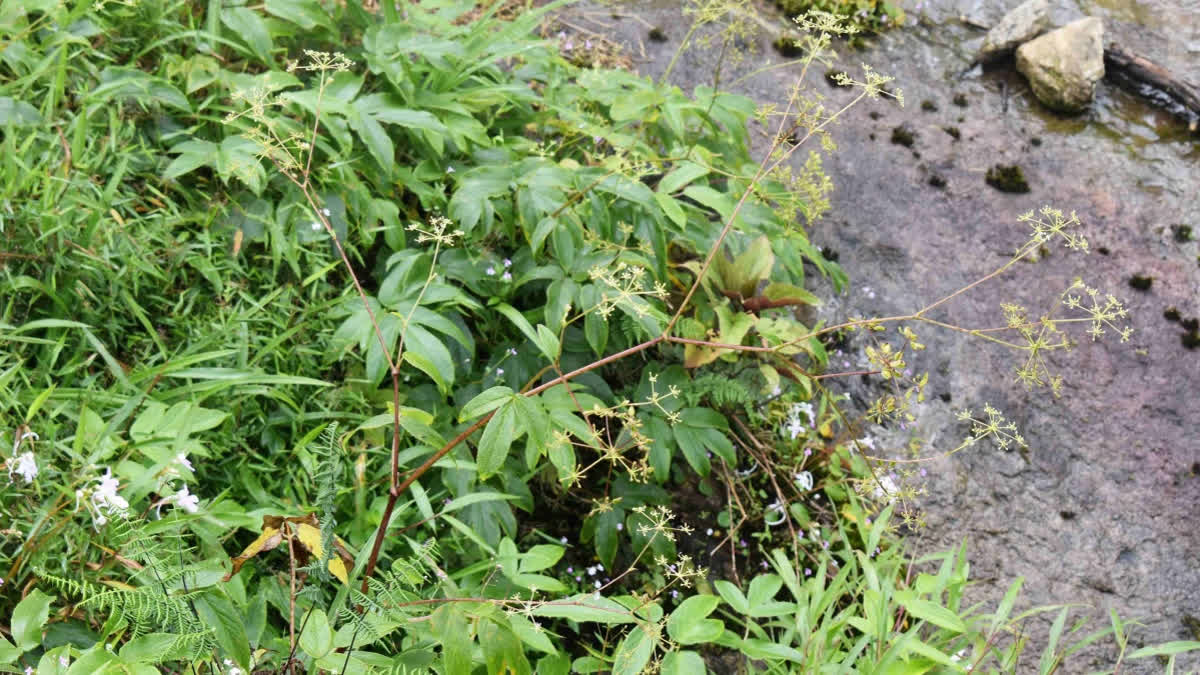
- 23 Oct 2025
In News:
Researchers have recently discovered a new plant species named Tetrataeniummanilalianum in the Eravikulam National Park, Kerala, adding to the extraordinary biodiversity of the Western Ghats, one of the eight “hottest biodiversity hotspots” in the world. The finding has been published in the Nordic Journal of Botany (Sweden), underscoring India’s growing contributions to global botanical research.
About Tetrataeniummanilalianum
- The newly identified plant belongs to the carrot family (Apiaceae/Umbelliferae), which also includes species such as carrot, coriander, cumin, fennel, and ajwain.
- It was discovered in the high-altitude grasslands bordering the shola forests of the Eravikulam National Park in Idukki district, Kerala.
- The plant bears white flowers and possesses underground rhizomes. It sprouts and blooms only during the monsoon season, adapting to the region’s moist climatic conditions.
- This discovery marks the 48th identified species within the Tetrataenium genus and is the first of its kind recorded globally.
- The species has been named in honour of Prof. K.S. Manilal, a distinguished botanist, founder president of the Indian Association for Angiosperm Taxonomy (IAAT), and former Head of the Department of Botany at the University of Calicut.=
Ecological Context – Eravikulam National Park
- Location: Situated in the Idukki district of Kerala, the park spans 97 sq. km along the summit of the Western Ghats.
- Topography: Encompasses rolling grasslands interspersed with shola forests in the upper valleys.
- Climate: Receives heavy rainfall during both the southwest (June–July) and northeast (October–November) monsoons, making it one of the wettest regions in the world.
- Flora: Rich in endemic species such as Actinodaphnebourdilloni, Microtropisramiflora, Pittosporum tetraspermium, and the once-thought-extinct orchid Brachycorythiswightii.
- Fauna: Home to the endangered NilgiriTahr, with nearly half the world’s population residing here. Other species include the Gaur, Sloth Bear, Nilgiri Langur, Tiger, Leopard, Giant Squirrel, and Wild Dog.
- The park also hosts the Anamudi Peak (2,695 m), the highest mountain in South India, and is famous for the Neelakurinji flowers that bloom once every twelve years.
Authorized Economic Operator (AEO) Programme

- 23 Oct 2025
In News:
- The World Trade Organization (WTO) has commended India’s liberalisedAuthorised Economic Operator (AEO) Programme for significantly enhancing the participation of micro, small, and medium enterprises (MSMEs) in global trade and for improving customs facilitation measures.
- The initiative, implemented by the Central Board of Indirect Taxes and Customs (CBIC), is increasingly being seen as a model for balancing trade facilitation with supply chain security.
About the AEO Programme
- Origin:The AEO Programme operates under the World Customs Organization’s (WCO) SAFE Framework of Standards to Secure and Facilitate Global Trade (SAFE FoS), adopted in June 2005 to strengthen global supply chain security.AEO constitutes one of the three key pillars of this framework.
- Implementation in India:
- Introduced by CBIC as a pilot project in 2011 and revamped through Circular No. 33/2016-Customs (July 22, 2016).
- Managed by the Directorate of International Customs (CBIC).
- Aligns with Article 7.7 of the WTO Trade Facilitation Agreement (TFA), which promotes the recognition of “trusted traders.”
Objectives
- To enhance international supply chain security and ease of doing business.
- To foster trusted partnerships between Customs and compliant business entities.
- To reduce transaction costs and clearance times for legitimate traders.
- To increase MSME participation in international trade through simplified customs procedures.
Key Features
- Voluntary and Trust-Based:AEO is a voluntary compliance programme that certifies entities—such as importers, exporters, logistics providers, customs brokers, custodians, and warehouse operators—who meet security and legal standards.
- Three-Tier Certification:
- AEO-T1, AEO-T2, and AEO-T3 for importers/exporters (in ascending order of benefits).
- AEO-LO for logistics operators, custodians, and other intermediaries.
- Simplified Customs Procedures:
- Reduced documentation requirements.
- Decentralised approvals at the Customs Zonal level.
- Segmented risk management—allowing Customs to focus on higher-risk consignments.
- Global Integration:
- Mutual Recognition Arrangements (MRAs) with countries such as South Korea and Hong Kong.
- Negotiations underway with the USA, UAE, and Taiwan for reciprocal recognition.
- Ensures international credibility and cross-border facilitation for Indian traders.
- Targeted Expansion:The CBIC aims to accredit over 3,500 AEO-certified entities across India to build a more secure and efficient trade environment.
Benefits to Traders
|
Benefit |
Description |
|
Faster Customs Clearance |
Direct Port Delivery/Entry for AEO-certified cargo |
|
Deferred Duty Payment |
Flexibility in duty payments for AEO-T2 and T3 holders |
|
Reduced Inspections |
Lower frequency of physical and documentary checks |
|
Self-Declaration for SION |
Simplified export-import documentation |
|
Priority Processing |
Expedited refunds, grievance redressal, and port clearances |
|
Global Recognition |
Reciprocal benefits under MRAs with partner countries |
|
Financial Efficiency |
Time and cost savings for compliant MSMEs |
Significance for India
- Supports MSMEs: Encourages smaller exporters and manufacturers to integrate with global value chains.
- Trade Facilitation: Reduces bureaucratic delays and improves India’s ranking in Ease of Doing Business and Logistics Performance Index.
- Customs Efficiency: Allows authorities to focus resources on non-compliant and high-risk traders.
- Global Credibility: Strengthens India’s image as a trusted trading partner under the WCO framework.
- Policy Alignment: Advances India’s commitments under the WTO Trade Facilitation Agreement.
Sinapic Acid

- 23 Oct 2025
In News:
Researchers from Nagaland University have identified Sinapic acid, a naturally occurring plant compound, as a potential therapeutic agent for accelerating wound healing in diabetic patients. The study — the first globally to demonstrate its oral efficacy — has been published in Nature Scientific Reports (Springer Nature).
About Sinapic Acid
- Chemical Nature:Sinapic acid is a natural phenolic acid and a derivative of cinnamic acid.
- Occurrence:Found widely in spices, citrus and berry fruits, vegetables, cereals, and oilseed crops.
- Properties:Possesses antioxidant, anti-inflammatory, antitumor, antibacterial, and neuroprotective activities.
- Mechanism of Action:The compound promotes wound repair by activating the SIRT1 pathway, which regulates tissue regeneration, angiogenesis, and inflammation control.
Key Research Findings
- First-of-its-kind Study:Demonstrated that oral administration of Sinapic acid accelerates wound healing in preclinical diabetic models.
- Optimal Dosage:The study observed an “inverted dose–response” — a lower dose (20 mg/kg) proved more effective than a higher one (40 mg/kg).
- Clinical Significance:
- Accelerates recovery from diabetic foot ulcers
- Reduces the risk of infection and amputation
- Offers a safe, plant-based, and affordable alternative to synthetic drugs
- Could enhance healthcare accessibility, especially in rural and resource-limited regions
About Diabetes Mellitus
- A metabolic disorder characterized by chronically elevated blood glucose levels.
- One of the world’s leading chronic diseases, affecting hundreds of millions globally.
- Complications:Include delayed wound healing, neuropathy, poor blood circulation, and diabetic foot ulcers, often resulting in amputation if untreated.
Significance of the Discovery
- Represents an indigenous scientific advancement with global healthcare potential.
- Supports the Make-in-India and One Health approach by integrating biotechnology and natural product research for sustainable medical solutions.
- Marks a major milestone in developing natural, safe, and cost-effective treatments for diabetic wound management.
Carabid Beetle
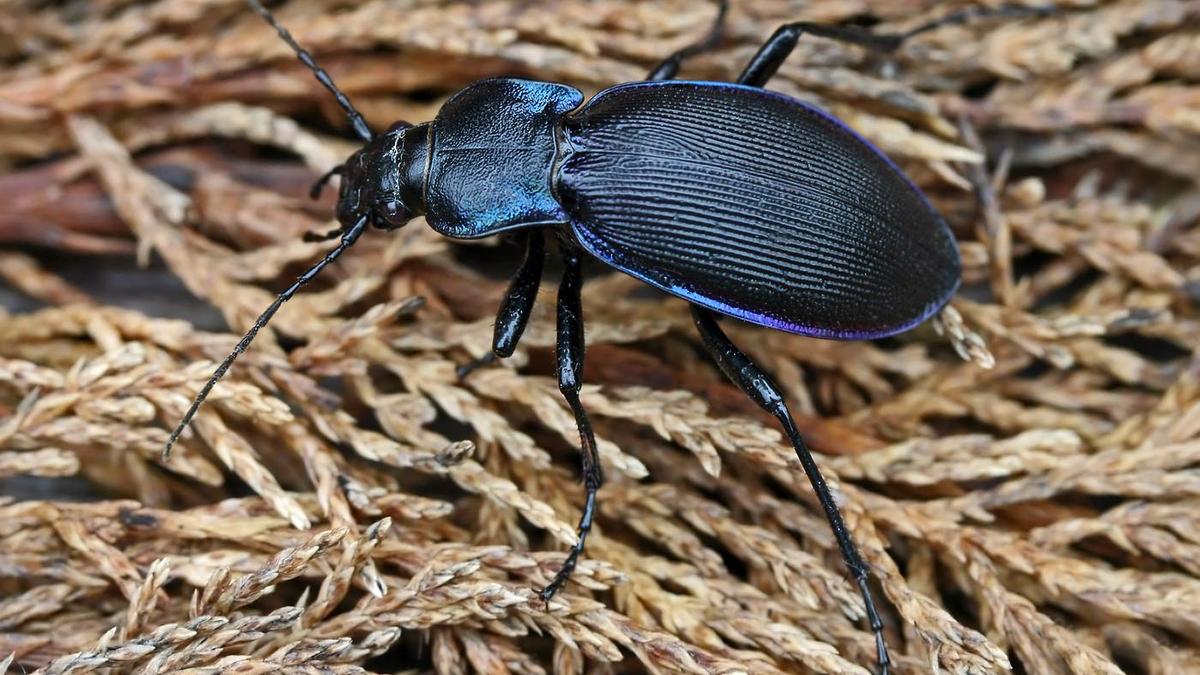
- 22 Oct 2025
In News:
- Recent research has identified Carabid ground beetles (family: Carabidae) as potential bioindicators for tracking microplastic contamination in soil ecosystems.
- Given the increasing global concern over microplastic pollution, especially in terrestrial environments, this finding highlights the ecological significance of these beetles in environmental monitoring and sustainable agriculture.
About Carabid Beetles
- Taxonomy: Belong to the family Carabidae, a large and diverse group of insects commonly known as ground beetles.
- Distribution: Found globally across a range of habitats — from forests, grasslands, and wetlands to agricultural fields and urban landscapes.
- Adaptability: Thrive in temperate and tropical climates, indicating high ecological resilience.
Physical and Biological Features
- Appearance:Typically, dark, shiny, and robust-bodied insects with long legs and strong mandibles, enabling them to be agile hunters.
- Defence Mechanism: When threatened, they emit a pungent odour to deter predators.
- Diet: Predatory in nature; they feed on pests such as caterpillars, slugs, snails, and other small invertebrates, making them beneficial for biological pest control.
- Life Cycle: Undergo complete metamorphosis — progressing through four stages: egg, larva, pupa, and adult.
- Reproduction:Typically,sexual with internal fertilization.
Ecological Role and Importance
- Natural Pest Regulators: Their predatory behavior helps control pest populations, reducing dependence on chemical pesticides in agriculture.
- Key Role in Soil Ecology:
- Contribute to nutrient cycling by preying on decomposers and pest species.
- Influence soil food web structure, functioning both as predators and prey for higher trophic levels.
- Indicator Species: Their abundance and diversity reflect the overall health and fertility of soil ecosystems.
- Bioindicator Concept:Bioindicators are species or groups whose presence, absence, or physiological condition reflects the quality of the environment and ecological changes.
- In Agriculture:In India and other agrarian regions, farmers have traditionally used bioindicators—such as insects, birds, and soil invertebrates—to predict rainfall, assess soil fertility, and evaluate pest management success.
- Microplastic Tracking Role:
- Researchers have found that Carabid beetles accumulate microplastic particles in their bodies, particularly within their digestive tracts, after feeding in contaminated soil.
- Their wide distribution and soil-dwelling nature make them ideal sentinels for studying microplastic pollution in terrestrial habitats.
- By analysing beetle tissues and microplastic residues, scientists can map the extent and distribution of soil microplastics with greater accuracy.
Why Carabid Beetles Are Effective Bioindicators
- Widespread Occurrence: Present in nearly all terrestrial ecosystems, ensuring broad geographic monitoring coverage.
- Ecological Sensitivity: Rapidly respond to changes in soil composition, contamination, and habitat quality.
- Trophic Position: As mid-level predators, they integrate pollutants and environmental stresses from lower trophic levels.
- Ease of Sampling: Readily captured and monitored through standard ecological methods like pitfall traps.
- Non-destructive Monitoring: Studying beetle populations allows long-term soil health assessments without altering ecosystems.
Impact of a Coronal Mass Ejection on the Lunar Exosphere
- 22 Oct 2025
In News:
- In a landmark discovery, the Indian Space Research Organisation (ISRO) announced that Chandrayaan-2’s orbiter has, for the first time, recorded the impact of a Coronal Mass Ejection (CME) from the Sun on theMoon’s exosphere — the thin, outermost layer of its atmosphere.
- The finding, made using the CHACE-2 (Chandra’s Atmospheric Composition Explorer-2) payload, marks a significant step in understanding how solar activity influences airless celestial bodies like the Moon.
About the Observation
- The CHACE-2 instrument, aboard Chandrayaan-2’s orbiter, detected a sharp rise in total pressure and molecular density in the Moon’s sunlit exosphere during a CME event on 10 May 2024.
- This observation confirmed, for the first time, theoretical predictions about how high-energy solar emissions affect the Moon’s extremely tenuous atmosphere.
- The findings were published in the journal Geophysical Research Letters (August 2025) under the title “Impact of a Coronal Mass Ejection on the Lunar Exosphere as Observed by CHACE-2 on the Chandrayaan-2 Orbiter.”
Understanding Coronal Mass Ejections (CMEs)
- CMEs are massive bursts of charged particles — primarily ionized hydrogen and helium — ejected from the Sun’s corona.
- When directed toward planetary bodies, these particles can interact with their atmospheres or surfaces, causing chemical and physical changes.
- On Earth, CMEs are often linked with geomagnetic storms and auroras, but their influence on airless bodies like the Moon had remained largely unobserved until this study.
The Lunar Exosphere: Nature and Composition
- The Moon’s atmosphere is so thin that it is classified as an exosphere — a region where individual gas atoms and molecules rarely collide.
- The boundary of the lunar exosphere directly touches the Moon’s surface, making it a “surface-boundary exosphere.”
- It is primarily composed of trace elements such as helium, argon, sodium, and potassium, released through processes like:
- Solar wind interactions (bombardment by charged particles),
- Photon-stimulated desorption (solar radiation freeing surface atoms), and
- Micrometeorite impacts (which vaporize surface material).
- Since the Moon lacks a global magnetic field, its exosphere is directly exposed to solar wind and CMEs, making it a natural laboratory for studying space-weather effects.
Chandrayaan-2 Mission Overview
- Launch Date: 22 July 2019, by GSLV-Mk III-M1 from Sriharikota.
- Components: Orbiter, Lander (Vikram), and Rover (Pragyan).
- Although communication with the lander was lost during descent on 7 September 2019, the orbiter remains fully operational in a 100 km × 100 km lunar orbit.
- Objective of CHACE-2: To analyse the composition, distribution, and temporal variability of the Moon’s neutral exosphere.
Key Findings of the Observation
- During the May 2024 CME event, CHACE-2 recorded a ten-fold increase in the number density of neutral atoms and molecules in the Moon’s dayside exosphere.
- The total pressure in the exosphere rose sharply, indicating enhanced release of surface atoms due to direct CME particle bombardment.
- The results provided empirical validation for long-held theoretical models on solar-lunar interactions.
- This was the first direct evidence of how the Moon’s atmospheric conditions respond dynamically to solar events.
Significance of the Discovery
- Scientific Advancement:
- Deepens understanding of space weather phenomena and their effects on airless celestial bodies.
- Offers valuable insights into Sun–Moon interactions and how charged solar particles shape planetary exospheres.
- Operational Relevance:
- Enhances the ability to predict and model space-weather impacts on future lunar missions and human habitats planned by 2040.
- Helps design radiation-resistant systems for lunar surface operations.
- Strategic and Technological Implications:
- Reinforces India’s growing expertise in planetary science and space environment monitoring.
- Demonstrates the long-term operational success of the Chandrayaan-2 orbiter, even years after its launch.
- Global Collaboration Potential:The findings can inform international lunar missions, including NASA’s Artemis and JAXA’s SLIM, contributing to a shared understanding of lunar space weather dynamics.
Japan Elects First Female Prime Minister

- 22 Oct 2025
In News:
- Recently, Japan’s National Diet elected Sanae Takaichi as its new Prime Minister, making her the first woman to hold that office in the nation’s history.
- Her ascent comes amid a shifting political backdrop, as the long-governing Liberal Democratic Party (LDP) lost its outright majority and secured a coalition with the Japan Innovation Party (Ishin).
Her appointment is notable not only for the gender milestone but also for signaling a potential policy shift—especially in Japan’s defence, economy and Indo-Pacific diplomacy.
Structural & Governance-Related Aspects
- Japan is a parliamentary constitutional monarchy. The Prime Minister is the real executive authority and is accountable to the lower house (House of Representatives).
- Her government is a minority coalition: the LDP formed an alliance with the Japan Innovation Party after the LDP-Komeito coalition collapsed. Thus, the new administration lacks a comfortable majority and will face legislative challenges.
- Despite her historic election, her cabinet contains only two women, raising questions about the depth of the gender-breaking moment for Japanese politics.
Key Challenges Ahead
- Economic recovery – Japan faces slow growth, inflationary pressures and demographic headwinds. Takaichi has pledged stimulus measures along the lines of previous “Abenomics”-style policies.
- Defence & security – With rising regional tensions, she is expected to push for higher defence spending and deeper coordination with the U.S. and Quad partners. Her first face-to-face diplomatic test includes welcoming U.S. President Donald Trump.
- Gender & social policy expectations – While she broke a barrier as Japan’s first female PM, her conservative positions on issues like same-sex marriage, imperial succession and women’s representation have drawn criticism.
- Policy implementation in a fragmented parliament – With no clear majority, passing major reforms will require coalition-building or compromises with opposition parties, marking a potential shift from LDP’s dominance.
Significance for India and the Indo-Pacific
From the Indian perspective—relevant to GS Paper II on International Relations—Takaichi’s election holds importance:
- Japan remains a key partner for India in the Indo-Pacific region, including in frameworks such as the Quad and supply-chain resilience initiatives.
- Her commitment to stronger defence and security cooperation with allies resonates with India’s own strategic concerns in the Indo-Pacific maritime domain.
- A stable, assertive Japan aligns with India’s interest in sustaining a free, open and rules-based maritime order.
MAM01 Monoclonal Antibody
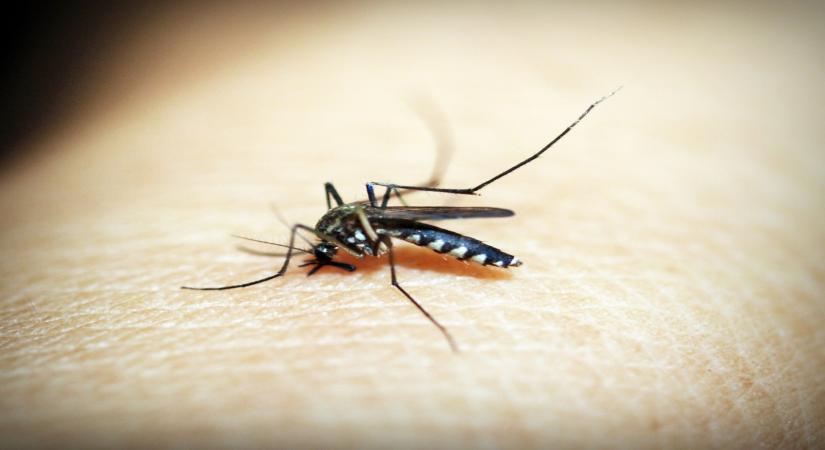
- 22 Oct 2025
In News:
- A major scientific breakthrough has emerged in the global fight against malaria, with U.S. researchers developing a novel monoclonal antibody (mAb) named MAM01, which has shown strong protection in early human trials.
- The results, published in The Lancet Infectious Diseases, mark a potential shift toward antibody-based malaria prevention, especially for vulnerable groups such as young children and pregnant women in endemic regions.
About MAM01 Monoclonal Antibody
- MAM01 is a laboratory-engineered monoclonal antibody designed to prevent malaria infection by targeting a highly conserved region of the Plasmodium falciparumcircumsporozoite protein (CSP) — a key molecule involved in the parasite’s entry into the bloodstream.
- By binding to this protein, MAM01 blocks infection at the earliest stage, preventing the parasite from reaching the liver or bloodstream.
Key Features
- Mode of Administration: A single injection of this long-acting antibody provides immediate protection lasting for several months.
- Target Groups: Especially beneficial for infants, young children, and pregnant women living in malaria-endemic regions.
- Duration of Protection: The antibody offers dose-dependent, months-long immunity with minimal side effects.
- Mechanism: MAM01 neutralizes the malaria parasite before it can infect liver cells, thus halting disease progression at the pre-erythrocytic stage.
Findings from the Clinical Trial
- Institution: Conducted by the University of Maryland School of Medicine’s Center for Vaccine Development and Global Health (CVD).
- Trial Design: A Phase 1, double-blind, placebo-controlled clinical study involving 38 healthy adult volunteers (aged 18–50) with no prior malaria exposure.
- Method: Participants were given either MAM01 or a placebo and later exposed to malaria-carrying mosquitoes in a controlled challenge study.
- Results:
- Participants receiving the highest dose of MAM01 showed complete protection from infection.
- All individuals in the placebo group developed malaria.
- No serious side effects or adverse events were reported.
- Outcome: The antibody demonstrated dose-dependent protection and a strong safety profile, providing proof-of-concept for antibody-based malaria prevention.
About Monoclonal Antibodies (mAbs)
Monoclonal antibodies are laboratory-made proteins that mimic the body’s natural immune response.
- Origin: Produced by cloning a single type of B cell to generate identical copies of an antibody.
- Specificity: Highly precise, designed to bind to a particular antigen such as a virus, bacterium, or parasite.
- Applications: Widely used in the treatment of cancer, autoimmune disorders, and infectious diseases (e.g., COVID-19, Ebola).
- Advantage: Offer targeted action with minimal side effects, and can provide immediate protection, unlike vaccines which require time for immunity to develop.
Significance of the Discovery
- A New Preventive Strategy: Unlike vaccines that may require multiple doses and boosters, MAM01 provides immediate and prolonged protection through a single dose — ideal for high-risk populations in malaria-endemic areas.
- Addressing a Global Health Burden: Malaria continues to cause over 600,000 deaths annually, predominantly among children in sub-Saharan Africa. Limited vaccine efficacy and emerging drug resistance make monoclonal antibodies a valuable addition to the malaria control toolkit.
- Technological and Health Equity Impact: This research demonstrates how cutting-edge biotechnological innovation can serve global health equity by providing affordable, scalable, and effective protection for populations in low- and middle-income countries.
- Complementary to Vaccines: MAM01 complements existing malaria vaccines like RTS,S (Mosquirix) and R21/Matrix-M, offering a dual-layered protection strategy — antibodies for immediate defence and vaccines for long-term immunity.
The New Arc of India–Australia Collaboration
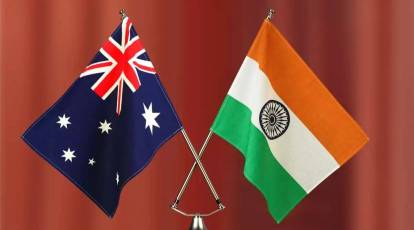
- 22 Oct 2025
In News:
India and Australia have entered a new phase of strategic and defence engagement, marked by Defence Minister Rajnath Singh’s visit to Canberra and Sydney for the inaugural India–Australia Defence Ministers’ Dialogue (2025). This was the first such visit by an Indian Defence Minister in over a decade, signifying a decisive step from declaratory convergence to operational cooperation.
Evolution of the Partnership
- Strategic Convergence: India and Australia’s partnership is rooted in shared democratic values and mutual commitment to a free, open, and rules-based Indo-Pacific. Concerns over China’s assertive behaviour and the erosion of maritime norms have driven cooperation through the Quad (India, Australia, Japan, U.S.) and bilateral ministerial dialogues since the elevation of ties to a Strategic Partnership (2009) and later a Comprehensive Strategic Partnership (CSP) in 2020.
- Operational Deepening:The relationship expanded beyond political rhetoric to practical cooperation through joint exercises such as Talisman Sabre, air-to-air refuelling arrangements, and logistics support agreements. These efforts laid the groundwork for interoperability and joint operational mechanisms.
- Industrial and Logistics Convergence:Both nations are now focusing on defence industrial collaboration, joint ship repair and maintenance, and supply-chain resilience. This industrial alignment reflects a shift from episodic engagement to a sustainable, institutionalised defence ecosystem.
Key Agreements and Mechanisms (2025)
- Joint Maritime Security Collaboration Roadmap– Strengthens maritime surveillance, domain awareness, and coordinated patrols across the Indo-Pacific.
- Mutual Submarine Rescue Support Arrangement– Establishes frameworks for joint underwater rescue, enhancing naval safety and contingency response.
- Air-to-Air Refuelling Agreement (2024)– Expands tactical endurance, enabling longer joint missions and greater air interoperability.
- Annual Defence Ministers’ Dialogue & Joint Staff Talks– Institutionalises defence cooperation and ensures continuity beyond political cycles.
- Defence Industry Roundtables– Promotes co-production, joint R&D, and mutual fleet maintenance, supporting an integrated defence industrial base.
Drivers of the Deepening Partnership
- Strategic Drivers: The shifting balance of power in the Indo-Pacific and China’s coercive regional posture have encouraged both nations to close operational gaps and coordinate maritime preparedness.
- Pragmatic Considerations: Both India and Australia seek to diversify their security dependencies, reducing overreliance on single external providers. Mechanisms such as logistics sharing, submarine rescue cooperation, and industrial collaboration build self-reliance and reduce friction during crises.
Industrial and Technological Synergy
- India’s strengths: Scalable defence production under Make in India and Innovations for Defence Excellence (iDEX), achieving record output of ?1.5 lakh crore (FY 2024–25).
- Australia’s strengths: Advanced maritime platforms like P-8A Poseidon, MQ-4C Triton, and Ghost Shark autonomous submarine, supported by strong R&D.
Together, they form a complementary ecosystem combining India’s scale and cost-efficiency with Australia’s technological sophistication.
Strategic and Industrial Significance
|
Dimension |
Impact |
|
Maritime Security |
Enhances sea-lane protection, freedom of navigation, and coordinated patrols across the Indian Ocean and Western Pacific. |
|
Defence Production Linkages |
Strengthens regional supply chains through joint repair, co-production, and maintenance facilities. |
|
Technological Complementarity |
Merges India’s production base with Australia’s innovation-driven R&D for advanced systems. |
|
Institutional Strengthening |
Annual dialogues and Joint Staff Talks ensure long-term continuity of defence cooperation. |
|
Regional Balance |
Reinforces Quad’s strategic cohesion and promotes a transparent, rules-based Indo-Pacific architecture. |
Hygrocybe Pellucida
- 21 Oct 2025
In News:
In a significant biodiversity finding, Hygrocybe pellucida, a rare and recently identified fungus species, has been recorded for the first time in Telangana at the Kawal Tiger Reserve. The species, known for its vivid waxy appearance, was first described in Kerala in 2024 and belongs to the Hygrophoraceae family. This sighting expands its known range in southern India and highlights the ecological richness of the reserve.
About Hygrocybe pellucida
- Part of the Hygrocybe (waxcap) genus, containing ~350 species globally
- Distinguished by bright, translucent, waxy fruit bodies
- Prefers nutrient-poor, moss-rich forest floors and unimproved grasslands
- Indicator of undisturbed and pristine microhabitats
- Newly documented fungus species in India, reinforcing fungal diversity in tropical ecosystems
Ecological Significance
The discovery underscores the value of fungi as bioindicators of healthy ecosystems. It reflects the presence of intact microhabitats—moist, shaded forest floors with moss and low human interference—and complements ongoing biodiversity documentation in the region. Researchers have identified over 80 fungal species in Kawal, including several first records for Telangana, such as Marasmiushaematocephalus and Dacryopinaxspathularia.
Kawal Tiger Reserve: Key Facts
- Location: Telangana, along the Godavari River in the Deccan Peninsula–Central Highlands
- Declared Tiger Reserve: 2012 (originally a Wildlife Sanctuary)
- Landscape Linkages: Connects to Tadoba–Andhari (Maharashtra) and Indravati (Chhattisgarh) Tiger Reserves
- Topography: Part of the Sahyadri mountain ranges
- Rivers: Catchment area for Godavari and Kadam
- Vegetation:Southern Tropical Dry Deciduous Forests
- Flora: Teak, bamboo, Anogeissuslatifolia, Mitragyna parviflora, etc.
- Fauna: Tiger, leopard, sambar, blackbuck, nilgai, chinkara, chousingha, spotted deer
Conservation Perspective
While tiger conservation often takes center stage, this discovery emphasizes that forest floor biodiversity —including fungi and microfauna—plays a critical ecological role and requires equal attention. The finding strengthens the case for protecting microhabitats and maintaining minimal human disturbance in core forest areas.
We Rise Initiative
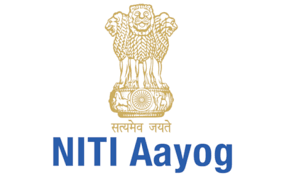
- 21 Oct 2025
In News:
India has launched a major initiative to strengthen women-led entrepreneurship and boost their participation in global trade. NITI Aayog’s Women Entrepreneurship Platform (WEP), in partnership with DP World, has introduced the ‘We Rise’ – Women Entrepreneurs Reimagining Inclusive and Sustainable Enterprisesprogramme. This initiative aligns with the Government of India’s vision of women-led development and is a part of WEP’s Award to Reward (ATR) framework.
Key Objectives and Features
- Purpose: To support women entrepreneurs in scaling their businesses globally
- Focus Areas:
- Trade facilitation
- Mentorship and business capacity-building
- Strategic partnerships and global market access
- Target Group: High-potential women-led MSMEs, particularly product-centric enterprises
- Coverage:100 women entrepreneurs will be selected for export-readiness programmes
- Global Exposure: Participants will showcase products at Bharat Mart in Dubai (Jebel Ali Free Zone), gaining access to international B2B and B2C markets
DP World will leverage its global supply chain expertise and logistics network to build export capabilities for women-led businesses, ensuring they meet international trade standards.
Strategic Significance
This initiative strengthens India’s women entrepreneurship ecosystem by providing:
- Access to finance and global markets
- Training, skill development, and compliance support
- Mentorship, networking, and business development services
It reinforces the importance of public-private collaboration in accelerating women's economic empowerment and building a more inclusive trade ecosystem.
Women Entrepreneurship Platform (WEP) Overview
- Established: 2018 by NITI Aayog; transitioned to PPP mode in 2022
- Engagement: Over 90,000 women entrepreneurs and 47 partners
- Mandate: Acts as a national aggregator and enabler to strengthen women-led businesses
- Core Functions: Addresses six ecosystem needs —
- Access to finance
- Market linkages
- Training & skilling
- Mentorship & networking
- Legal & compliance assistance
- Business development services
ATR Initiative
Launched in 2023, the Award to Reward (ATR) model institutionalises partnerships by celebrating women entrepreneurs and fostering scalable, outcome-driven collaborations.
Nafithromycin
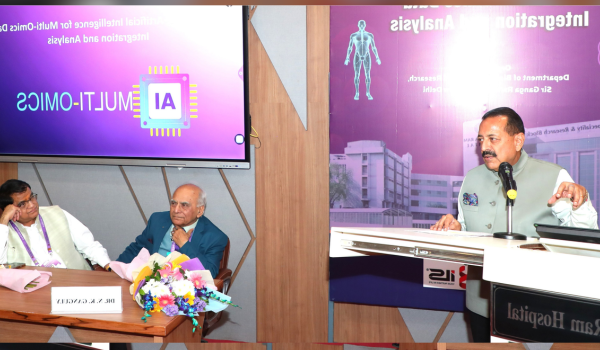
- 21 Oct 2025
In News:
India has achieved a major scientific milestone with the development of Nafithromycin, the country's first indigenously conceptualized, developed, and clinically validated antibiotic. Announced by the Union Science and Technology Minister, this breakthrough reflects India's growing self-reliance in the biotechnology and pharmaceutical sector and its commitment to addressing the global challenge of Antimicrobial Resistance (AMR).
About Nafithromycin
- Developed with support from: Biotechnology Industry Research Assistance Council (BIRAC)
- Trade Name:Miqnaf
- Target Use: Community-Acquired Bacterial Pneumonia (CABP)
- Key Beneficiaries: Cancer patients and individuals with poorly controlled diabetes
- Spectrum & Novelty: Effective against both typical and atypical respiratory pathogens; marks the first new antibiotic in its class globally in over 30 years
Nafithromycin is particularly relevant in India where respiratory infections remain a key public-health concern. The antibiotic is designed to combat drug-resistant respiratory infections, providing a potent solution amid rising antimicrobial resistance.
Why It Matters: Tackling AMR
Antimicrobial Resistance (AMR) occurs when microbes such as bacteria, viruses, fungi, or parasites develop the ability to defeat drugs designed to kill them. As a result, common infections become harder to treat, increasing the risk of severe illness, prolonged hospitalization, disability, and death. While AMR is a natural evolutionary process, misuse and overuse of antimicrobials significantly accelerate it. Nafithromycin’s development represents a strategic step in strengthening India's response to AMR.
Related Scientific Milestones Announced
The Minister also highlighted other key achievements underscoring India’s expanding biotech capabilities:
- Indigenous gene-therapy trial success for Hemophilia at Christian Medical College, Vellore — achieving 60–70% correction with zero bleeding episodes
- Human genome sequencing initiative: Over 10,000 genomes already sequenced, target set to reach 1 million
- Deployment of AI-based hybrid mobile clinics to improve healthcare access in rural and remote regions
These advancements reflect India’s push toward a self-sustainable innovation ecosystem, combining science, technology, and healthcare delivery to support the vision of a developed and technology-driven nation.
Zombie Deer Disease
- 21 Oct 2025
In News:
Florida has recently confirmed new cases of Chronic Wasting Disease (CWD), commonly referred to as “Zombie Deer Disease,” heightening concerns among wildlife authorities in the United States. This marks the second confirmed case in wild deer in the state since the first detection in June 2023, triggering an emergency response and surveillance measures in affected regions.
What is Chronic Wasting Disease (CWD)?
CWD is a progressive, fatal neurodegenerative disease affecting deer, elk, moose, and reindeer. It damages the central nervous system, causing:
- Severe weight loss
- Disorientation and loss of awareness
- Abnormal behavior, including reduced fear of humans
- Excessive salivation, increased drinking and urination
- Progressive debilitation and death
The incubation period ranges from 18–24 months, during which animals may appear healthy before showing symptoms.
Cause
- CWD is caused by prions — infectious misfolded proteins that trigger abnormal protein folding in the brain.
- Unlike bacteria or viruses, prions contain no DNA or RNA.
- Prions create spongy holes in brain tissue, leading to neurological failure.
Transmission
CWD spreads through:
- Direct contact among animals
- Contaminated saliva, urine, blood, and feces
- Environmental persistence — prions survive for years in soil, plants, and water
- Movement of infected animals
- Scavengers dispersing prion material
- Use of natural deer urine lures by hunters
Prions are extremely resilient, making eradication difficult.
Threat to Humans
- No confirmed human cases have been reported so far.
- However, health experts advise caution due to similarities with Bovine Spongiform Encephalopathy (mad cow disease), a prion disorder linked to human deaths in the past.
- There is no cure or vaccine for CWD.
Tuvalu Island
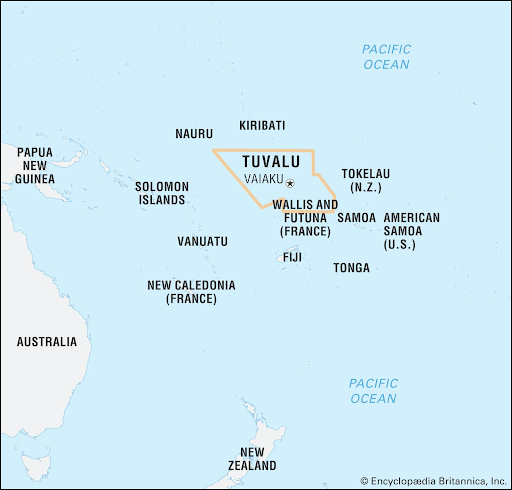
- 21 Oct 2025
In News:
Tuvalu has formally become the 90th State Member of the International Union for Conservation of Nature (IUCN), marking a major step in strengthening its global environmental engagement. This development aligns with the nation’s growing efforts to protect its fragile ecosystems and advocate for climate-vulnerable island states.
About Tuvalu
- Located in the west-central Pacific Ocean between Australia and Hawaii, Tuvalu (formerly the Ellice Islands) comprises nine low-lying atolls and coral islands spanning just 26 sq km—making it the fourth-smallest country in the world.
- With no point higher than 4.5 m above sea level, the country faces existential threats from sea-level rise, coastal erosion and climate change.
- It has an Exclusive Economic Zone (EEZ) of around 900,000 sq km, rich in marine biodiversity, coral reefs, fisheries and migratory seabirds.
- Tuvalu operates as a parliamentary democracy under a constitutional monarchy within the Commonwealth, recognizing King Charles III as head of state. Funafuti is the capital, and Tuvaluan and English are widely spoken. Its economy relies on subsistence activities, remittances, limited copra production, sale of postage stamps, and fisheries licensing revenues.
Significance of IUCN Membership
By joining IUCN, Tuvalu gains access to a global network of conservation experts, funding avenues and policy platforms. This membership strengthens its capacity to pursue:
- Climate change adaptation and resilience strategies
- Sustainable fisheries and marine resource management
- Community-driven conservation initiatives
- Partnerships with bodies such as the Green Climate Fund and Global Environment Facility
The move comes at a time when Pacific Island nations are pushing for stronger global action on climate change, adaptation financing and protection of ocean ecosystems.
Why It Matters
Tuvalu’s participation in IUCN brings heightened international focus on the plight of small island developing states (SIDS) facing climate-induced challenges. It enhances the country's voice in shaping global environmental governance and reinforces the need to safeguard vulnerable ecosystems and cultures deeply connected to the ocean.
Chiron

- 18 Oct 2025
In News:
Astronomers have, for the first time, observed the formation and evolution of a ring system around Chiron—an icy small body in the outer Solar System. This marks a significant development in planetary science, offering rare insight into ring-formation processes beyond giant planets.
About Chiron
- Discovery: Identified in 1977 by astronomer Charles Kowal.
- Classification: Belongs to the centaur class—objects orbiting between Jupiter and Neptune that exhibit traits of both asteroids and comets.
- Orbit: Completes one revolution around the Sun in ~50 years.
- Size: Approx. 200 km in diameter.
- Composition: Predominantly rock, water ice, and complex organic compounds.
- Behaviour: Shows comet-like activity, sometimes ejecting gas and dust.
Ring System Around Chiron
- First confirmed ring formation observed around a small icy body.
- Comprises four rings, with three inner rings embedded in a dust-disk and an outer ring located unusually far from the body.
- Rings likely contain water-ice particles mixed with rocky material, similar to Saturn’s rings.
- Observations from 2011 to 2023 indicate dynamic evolution of the ring system.
Distances of Rings From Chiron's Center (Approx.):
- Inner Rings: ~273 km, ~325 km, ~438 km
- Outer Ring: ~1,400 km (requires further stability confirmation)
Significance of the Discovery
- Provides a real-time snapshot of ring evolution, offering clues to:
- Formation mechanisms of rings around small bodies
- Dynamics of dust-disk systems in space
- Broader processes that form moons and debris structures
- Enhances understanding of small-body systems, complementing prior ring discoveries around:
- Chariklo(centaur)
- Haumea
- Quaoar
How Was It Observed?
Researchers used stellar occultation—studying changes in starlight as Chiron passed in front of a distant star. Data from Brazil, France, and Spain enabled high-precision observations.
Possible Origins of the Rings
Hypotheses include:
- Remnants of a destroyed moon
- Collisional debris from impacts with space material
- Material ejected by Chiron itself
- Or a combination of these processes
Water-ice plays a key stabilizing role by preventing particles from clumping into a moon.
Scheme for Innovation and Technology Association with Aadhaar
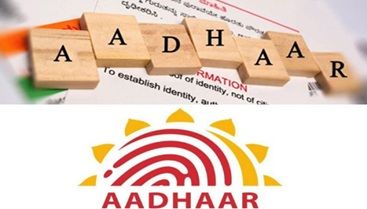
- 18 Oct 2025
In News:
- The Unique Identification Authority of India (UIDAI) has launched the Scheme for Innovation and Technology Association with Aadhaar (SITAA) to advance India's digital identity framework and safeguard Aadhaar against evolving cyber threats, particularly AI-driven deepfakes, spoofing, and biometric fraud.
- The initiative reflects India's objective to build secure, scalable, indigenous, and globally benchmarked identity solutions, aligning with the broader vision of Digital Public Infrastructure and Atmanirbhar Bharat.
Key Objectives
- Strengthen the security and reliability of Aadhaar authentication.
- Develop cutting-edge biometric and AI-based security technologies.
- Foster collaboration among startups, academia, and industry for co-development.
- Encourage indigenization of identity-tech solutions.
- Build future-ready digital identity systems capable of countering emerging threats.
Strategic Partnerships
To operationalize the programme, UIDAI has partnered with:
- MeitY Startup Hub (MSH) – for technical mentoring, incubation and accelerator support.
- NASSCOM – for industry linkages, global outreach, and entrepreneurship support.
Pilot Phase Focus Areas
The SITAA pilot has launched three innovation challenges open to eligible startups, research institutions, and industry partners (applications open till 15 November 2025):
|
Challenge |
Objective |
Key Requirements |
|
Face Liveness Detection |
Prevent spoofing in face-based authentication |
SDK for passive/active liveness; detect photos, videos, masks, morphs, deepfakes; work across devices/environments; edge + server capability |
|
Presentation Attack Detection (PAD) |
Enhance AI/ML-based face authentication resilience |
Real-time PAD for print, replay, morphs, masks, deepfakes; privacy-compliant; scalable; interoperable with Aadhaar APIs |
|
Contactless Fingerprint Authentication |
Enable mobile-based fingerprint verification |
Capture fingerprint via smartphone/low-cost devices; spoof detection; AFIS-compliant templates; demo app & QC tool required |
Why SITAA Matters
- Deepfake threat escalation: Attempts to bypass biometric security demand next-gen AI counter-measures.
- Contactless biometrics: Essential in post-pandemic authentication models and mobile-first delivery.
- Demographic and environmental variability: Aadhaar works across diverse conditions and populations, making robust tech essential.
- Strengthening trust in India’s digital public infrastructure systems like Aadhaar, UPI, DigiLocker, and ABHA.
Technological Focus Areas
- Advanced biometrics (face, fingerprint)
- AI-driven liveness and spoof detection
- Privacy-preserving authentication methods
- Secure digital identity frameworks
- Mobile-first biometric solutions
Public Trust Doctrine
- 18 Oct 2025
In News:
The Supreme Court has recently clarified that the Public Trust Doctrine (PTD) applies not only to naturally occurring water bodies such as rivers, lakes, and wetlands, but also to artificial or man-made waterbodies that perform vital environmental or ecological functions. This judgment marks a significant expansion of environmental jurisprudence in India, underscoring that ecological protection cannot hinge solely on whether a waterbody is naturally formed.
Case Background: Futala Lake, Nagpur
The ruling came in a case concerning Futala Lake in Nagpur, Maharashtra, where an NGO challenged recreational development activities around the lake, arguing that it should be treated as a wetland.
Key details:
- Futala Lake (Telangkhedi Tank) was built in 1799 by Shri Gyanoji Bhosale.
- The lake and its catchment cover ~200 hectares.
- Constructed historically for irrigation, making it man-made.
The Bombay High Court had earlier allowed non-permanent recreational structures while directing authorities to preserve the lake’s environmental integrity. The Supreme Court upheld this decision.
Supreme Court’s Key Observations
- Artificial waterbodies serving ecological functions fall within the Public Trust Doctrine.
- Such resources must be protected under the constitutional mandate of Articles 48-A and 51-A(g) (environmental protection duties of the State and citizens).
- Futala Lake, being artificially created for irrigation, does not qualify as a "wetland" under the Wetlands (Conservation and Management) Rules, 2017, which exclude human-made irrigation tanks.
- Nonetheless, the lake deserves environmental protection through PTD because it contributes to urban ecology and public welfare.
The Court emphasized that PTD imposes duties on authorities to prevent irreversible damage and ensure sustainable use, reinforcing the right to a healthy environment under Article 21.
Doctrinal Significance: Public Trust Doctrine (PTD)
Meaning: The State acts as a trustee of natural and environmental resources, which belong to the public and cannot be monopolized, degraded, or transferred for private gain.
Origins:
- Roots in Roman law (res communes)
- Developed through English common law
- Recognized in Indian jurisprudence (e.g., M.C. Mehta v. Kamal Nath, 1997)
Core Principles
- Resources of collective importance must remain available for public use and ecological balance.
- The State cannot alienate, privatize, or degrade these resources.
- Resources must be maintained for specific public and ecological purposes.
Ruling’s Broader Implications
- Expands PTD protection to man-made lakes, tanks, reservoirs that support ecology and public use.
- Strengthens legal framework for urban waterbody conservation amid fast-paced infrastructure growth.
- Reinforces sustainable development, ecological preservation, and inter-generational equity.
Taftan Volcano
- 18 Oct 2025
In News:
A recent scientific study has revealed renewed geological activity at Mount Taftan, a stratovolcano in southeastern Iran, raising concerns among volcanologists and regional authorities. The volcano, believed to have remained inactive for nearly 700,000 years, has exhibited ground uplift and increased gas emissions, suggesting possible magmatic or hydrothermal movement beneath the surface.
Key Findings from Recent Study
- Research published in Geophysical Research Letters notes that ground near Taftan’s summit rose by ~9 cm between July 2023 and May 2024.
- Persistent uplift signals buildup of gas pressure below the volcano.
- Residents reported strong sulfurous fumes, detectable up to 50 km away in the city of Khash.
- Satellite monitoring (ESA’s Sentinel-1) indicated activity in absence of ground-based GPS stations.
Scientists stress there is no immediate eruption threat, but the volcano should be reclassified from "extinct" to dormant and monitored more closely due to increasing activity.
About Taftan Volcano
- Location: Southeastern Iran, ~56 km from Pakistan border
- Elevation:3,940 m (12,927 ft)
- Type: Semi-active stratovolcano (composite volcano)
- Volcanic Arc: Only active volcano in the Makran subduction zone
- Geological Setting: Formed due to subduction of Arabian oceanic crust beneath Eurasian plate
- Key Features: Two summits — Narkuh and Matherkuh
- Activity Indicators:
- Active hydrothermal system
- Sulfur-emitting vents (fumaroles)
- No recorded eruptions in human history
What is a Stratovolcano?
- Tall, steep-sided cone-shaped volcano
- Commonly found along convergent plate boundaries
- Composed of alternating lava flows and pyroclastic deposits
- Eruptions tend to be explosive due to viscous magma (andesite/dacite)
- Examples: Mt. Fuji, Mt. St. Helens, Vesuvius, Krakatoa
Maldives Achieves Triple Elimination of Mother-to-Child Transmission (MTCT)
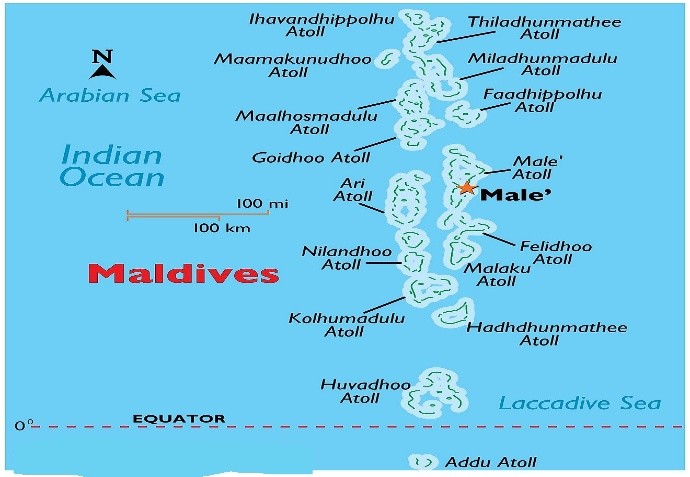
- 18 Oct 2025
In News:
In a landmark development in global public health, the Maldives has become the first country in the world to be validated by the World Health Organization (WHO) for eliminating mother-to-child transmission of HIV, syphilis, and hepatitis-B. This achievement represents a major milestone in protecting newborns from lifelong infections and advancing maternal-child health security.
Significance of the Achievement
Mother-to-child transmission (MTCT) of HIV, syphilis, and hepatitis-B remains a pressing concern worldwide, particularly in developing regions. In the WHO South-East Asia Region alone, thousands of infants are still born with congenital infections annually. Against this backdrop, Maldives’ accomplishment sets a benchmark for public health governance and disease elimination.
Key Drivers Behind Maldives’ Success
The achievement results from a comprehensive, integrated and equity-based healthcare strategy, backed by political commitment and strong health investments.
1. Universal Maternal Care and Screening
- Over 95% of pregnant women in Maldives receive antenatal care.
- Nearly all are screened for HIV, syphilis, and hepatitis-B.
- Universal access extends to migrants and remote island populations.
2. Robust ImmunisationProgramme
- Above 95% hepatitis-B birth-dose coverage within 24 hours of birth.
- Full childhood immunisation coverage consistently maintained.
3. Demonstrated Zero Transmission
- No infant HIV or syphilis cases reported since 2022.
- National survey (2023) confirmed zero hepatitis-B among school-entry children.
4. Strong Public Health Infrastructure
- Universal health coverage system offering free antenatal and diagnostic services.
- Government spends over 10% of GDP on health, among the highest in the region.
- Effective partnerships across public, private, and civil society sectors, supported by WHO technical assistance.
Strategic Measures Adopted
- Integrated maternal-child health services
- Early testing and treatment protocols
- Strong laboratory systems and surveillance
- Community outreach and migrant health inclusion
- High-quality vaccination logistics
Future Roadmap
To sustain the elimination status and deepen maternal-newborn care outcomes, Maldives plans to:
- Expand digital public-health systems
- Strengthen laboratory and monitoring quality
- Enhance services for key and migrant populations
- Increase private-sector collaboration
WHO will continue supporting Maldives to maintain momentum toward broader maternal, child, and adolescent health goals.
Maldives at a Glance
- Location: North-central Indian Ocean; southwest of India and Sri Lanka
- Capital:Malé
- Population: ~5.6 lakh (2025)
- Geography: ~1,200 coral islands across 26 atolls; ~200 inhabited
- Feature: Lowest-lying nation globally (maximum elevation ~1.8m)
- Climate: Tropical; Southwest monsoon (May–Aug), Northeast monsoon (Dec–Mar)
Military Combat Parachute System

- 17 Oct 2025
In News:
- India has achieved a major milestone in defenceindigenisation with the successful testing of the Military Combat Parachute System (MCPS) by the Defence Research and Development Organisation (DRDO).
- The system demonstrated a combat freefall jump from 32,000 feet, making it a significant advancement in India’s aerial delivery capability.
About the Military Combat Parachute System
The MCPS is an indigenous high-altitude parachute system designed to support special operations and military freefall missions in extreme altitudes and hostile environments.
- Developed by:
- Aerial Delivery Research & Development Establishment (ADRDE), Agra
- Defence Bioengineering & Electromedical Laboratory (DEBEL), Bengaluru
Key Features
- Altitude Capability: Successfully tested from 32,000 feet, and the only parachute system in operational use with the capability to be deployed above 25,000 feet by Indian forces.
- Enhanced Tactical Performance:
- Lower rate of descent
- Superior steering and maneuvering abilities
- Allows accurate navigation and landing at designated drop zones
- Navigation Support: Compatible with NavIC (Indian satellite navigation system), ensuring secure and interference-free guidance.
- Mission Capability: Enables safe aircraft exit, controlled descent, and precise landing in complex terrains—critical for special forces operations.
Strategic Significance
- Self-Reliance in Defence:
- Major step towards Aatmanirbhar Bharat in aerial delivery systems
- Reduces dependence on foreign parachute systems and maintenance support
- Operational Advantage:
- Ensures reliability in high-risk environments
- Immune to external interference/denial of service attempts
- Enhances special operations capability against any adversary
- Logistics & Lifecycle Benefits:
- Faster maintenance turnaround compared to imported systems
- Ensures availability during conflicts or war-time contingencies
SAIME Initiative
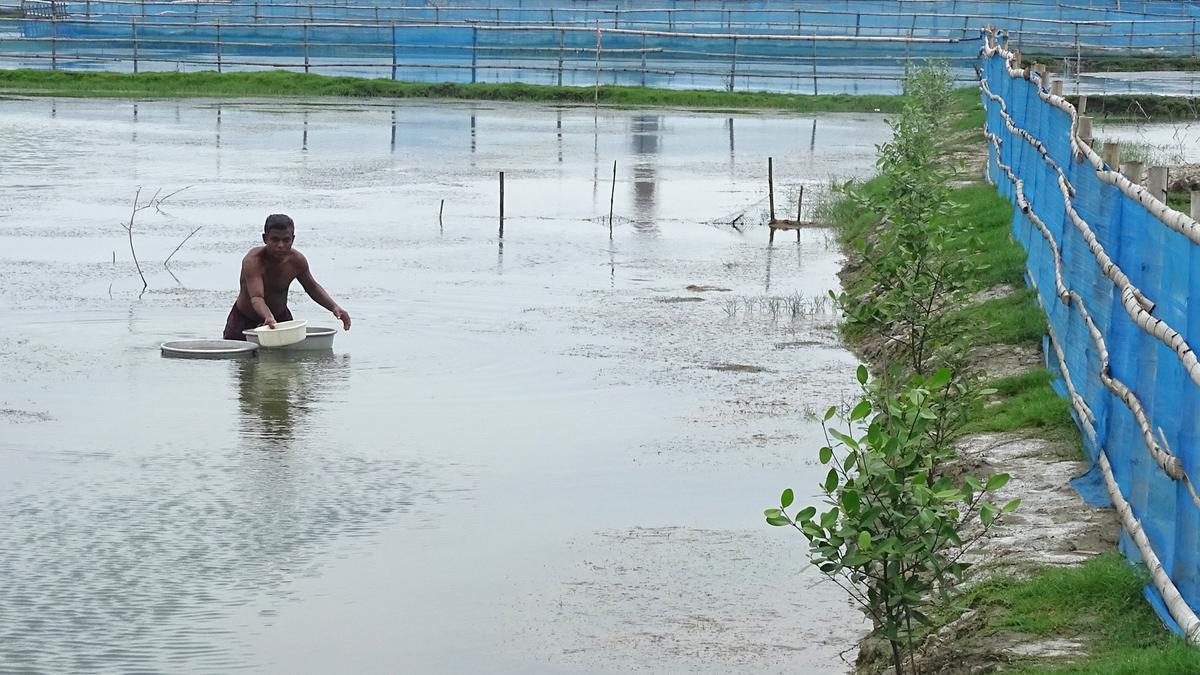
- 17 Oct 2025
In News:
A climate-adaptive aquaculture model from West Bengal’s Sundarbans — the Sustainable Aquaculture in Mangrove Ecosystems (SAIME) initiative — has recently received Global Technical Recognition from the Food and Agriculture Organization (FAO) of the United Nations. This recognition highlights a successful nature-based livelihood model that integrates aquaculture with mangrove restoration.
About the SAIME Initiative
The SAIME programme is a unique multi-stakeholder partnership aimed at promoting sustainable, mangrove-linked shrimp aquaculture while restoring fragile coastal ecosystems. By combining aquaculture practices with mangrove conservation, it seeks to build climate-resilient livelihoods in the vulnerable Sundarbans delta region.
- Focus: Climate-adaptive, ecosystem-based livelihood system
- Key Approach: Integrates brackish-water shrimp farming with mangrove plantation
- Objective:
- Protect mangrove forests
- Enhance biodiversity
- Provide sustainable income to coastal communities
- Implementation Partners:
- Nature Environment & Wildlife Society (NEWS)
- Global Nature Fund (GNF)
- Naturland (Germany-based standards organisation)
- Bangladesh Environment & Development Society (BEDS)
This model demonstrates how community-driven conservation can coexist with economic activity, reducing ecological pressure on mangrove ecosystems while supporting rural incomes.
Significance
Environmental Benefits
- Restores mangrove cover in cyclone-prone Sundarbans
- Enhances carbon sequestration, aiding climate mitigation
- Prevents coastal erosion and acts as a buffer against storm surges
- Supports rich biodiversity, including fish and crustacean populations
Socio-Economic Impact
- Offers a stable income source to local fishers and farmers
- Reduces dependency on destructive practices
- Strengthens climate resilience and livelihood security in vulnerable communities
Mangroves: Key Features
- Salt Tolerance:Specialised roots and salt-excreting mechanisms
- Aerial/Pneumatophore Roots: Enable respiration in waterlogged soils
- Prop Roots: Provide support against tides and cyclones
- Viviparous Seeds: Germinate on parent plant for survival in saline water
- Carbon Storage: Among the most carbon-rich ecosystems globally
Mangroves play a crucial role in mitigating climate change, protecting coasts, and supporting marine life — making their protection vital for ecological balance and disaster resilience.
Fare se Fursat Fixed Airfare Scheme
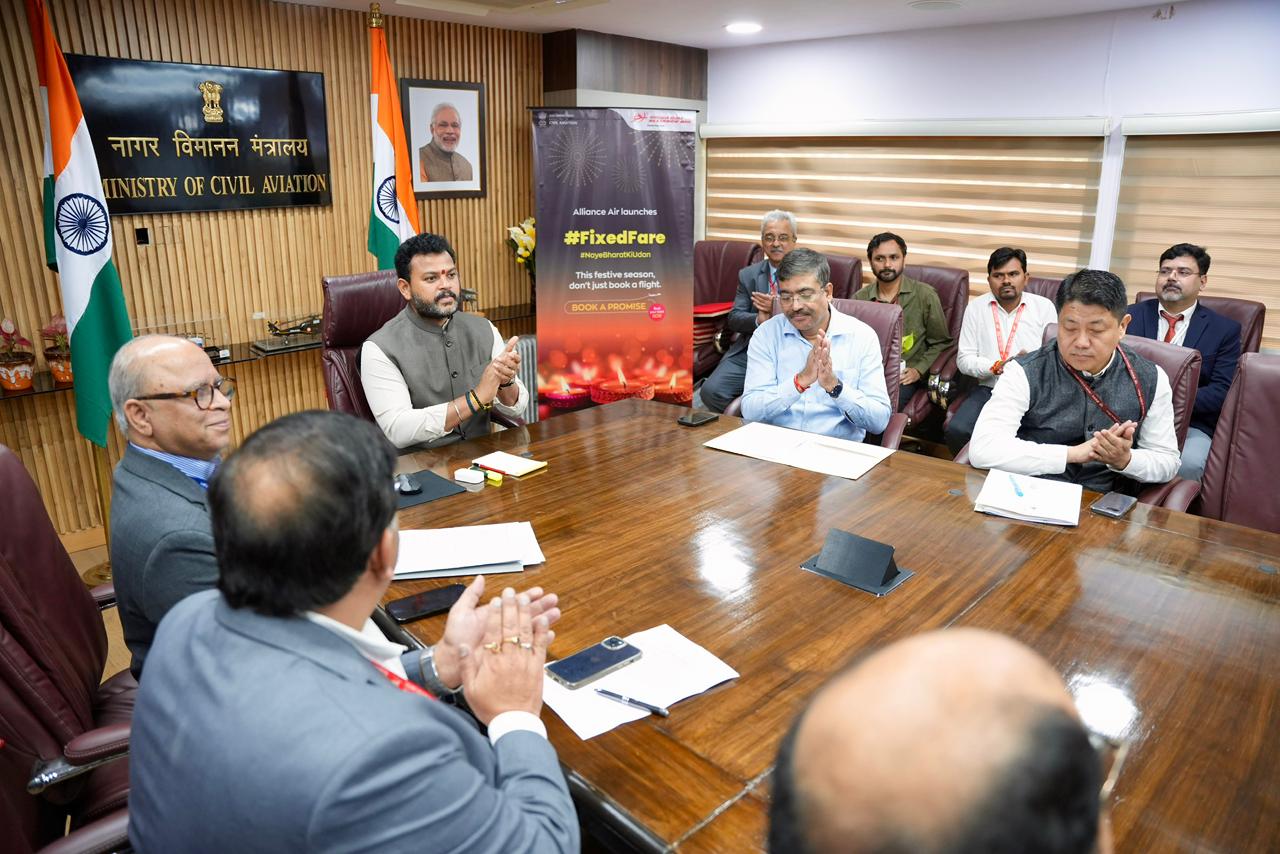
- 17 Oct 2025
In News:
The Government of India has launched the ‘Fare Se Fursat’ Fixed Airfare Scheme, a first-of-its-kind initiative aimed at providing predictable and transparent airfares on select regional routes. Introduced by the Ministry of Civil Aviation, the scheme reflects the government’s continued push to democratize air travel and enhance regional connectivity.
About the Scheme
- Launched by: Ministry of Civil Aviation & Alliance Air
- Purpose: To eliminate uncertainty associated with fluctuating airfares and promote ease of flying.
- Key Feature:Single, fixed ticket price irrespective of booking date — even for same-day travel.
- Pilot Phase:
- 13 October – 31 December 2025
- Operated on select regional routes
- Airline: Alliance Air, India's government-owned regional carrier
Objective & Rationale
- Address dynamic pricing concerns: Indian aviation typically follows dynamic pricing based on demand and seasonality, often causing high last-minute fares.
- Make air travel accessible: Inspired by the UDAN scheme, the initiative targets middle-class, lower-middle-class, and neo-middle-class passengers, especially from Tier-2 and Tier-3 cities.
- Increase first-time flyers: The scheme aims to build confidence among new travelers by offering predictable fares, reducing financial anxiety linked to last-minute price surges.
Significance
- Supports UDAN (UdeDesh ka AamNagrik) vision of affordable regional connectivity.
- Strengthens last-mile aviation by enabling easier travel from smaller towns.
- Reinforces government's push for passenger-centric aviation policies (e.g., affordable airport cafés launched earlier under UDAN Yatri services).
- Promotes air travel as an everyday mode of transportation, not a luxury.
Why It Matters
- Predictability: Removes uncertainty in ticket prices, encouraging travel planning.
- Accessibility & Inclusivity: Bridges regional air travel gaps and widens aviation access to new socio-economic groups.
- Public-service Focus: Prioritizes passenger welfare over profit maximization, aligning with the vision of “Naye Bharat ki Udaan”.
Mission Drishti
- 17 Oct 2025
In News:
India’s private space sector is set to achieve a major milestone with GalaxEye, a Bengaluru-based space-tech start-up, preparing to launch the world's first multi-sensor Earth observation (EO) satellite, Mission Drishti, in early 2026. The mission marks a significant step toward creating an advanced satellite constellation for real-time, high-precision geospatial intelligence.
About Mission Drishti
- World’s first multi-sensor EO satellite combining Synthetic Aperture Radar (SAR) and high-resolution optical imaging on a single platform.
- Built by GalaxEye — one of India’s leading private space-tech start-ups.
- India’s largest privately-built satellite and the highest-resolution satellite (1.5 m) developed in the country.
- Mass: ~160 kg.
- Underwent successful structural tests at ISRO’s U R Rao Satellite Centre, proving its ability to withstand harsh space conditions.
- Mission Drishti is the first step in deploying a constellation of 8–12 satellites by 2029 (company target: 8–10 in next four years).
Key Features & Technological Significance
- Dual Payload Technology: SAR + optical sensors enable:
- Imaging in all weather conditions
- Day and night coverage
- High-precision, multi-layered data
- High-resolution EO imagery optimized across spatial, spectral, and temporal dimensions.
- Enables actionable multisource imaging intelligence—a capability currently unexplored globally.
According to the company, Mission Drishti opens a new era in satellite imaging by fusing multiple sensing technologies to provide real-time situational awareness.
Applications
Mission Drishti aims to strengthen high-end geospatial capabilities across national and commercial sectors:
|
Sector |
Use-case |
|
Defence& Security |
Border surveillance, tactical intelligence |
|
Disaster Management |
Floods, landslides, cyclone & emergency monitoring |
|
Infrastructure & Utilities |
Structural health monitoring, urban planning |
|
Agriculture |
Crop monitoring, precision farming support |
|
Finance & Insurance |
Risk assessment, disaster claim validation |
The mission aligns with rising global demand for accurate Earth observation data, especially amid geopolitical tensions and climate-driven emergencies.
Significance for India’s Space Ecosystem
- Enhances India’s capabilities in commercial EO intelligence, traditionally dominated by the US & Europe.
- Strengthens private-sector participation under India’s space reforms and IN-SPACe framework.
- Potential to integrate AI and advanced imaging analytics, improving decision-making in governance and industry.
- Boosts India’s aspiration to become a global space-technology provider.
India’s Quantum Breakthrough in Cybersecurity

- 17 Oct 2025
In News:
India has achieved a major milestone in quantum technology and cybersecurity. Researchers at the Raman Research Institute (RRI), Bengaluru, have demonstrated and certified the generation of true random numbers using a general-purpose quantum computer.This breakthrough positions India at the forefront of quantum-secure digital infrastructure, marking a key outcome under the National Quantum Mission.
Why Randomness Matters in Digital Security
- Modern encryption — including banking, digital communication, defence networks and authentication systems — relies on random numbers.These numbers form the basis of encryption keys and secure passwords. The more unpredictable the number, the stronger the security.
Current challenge
- Most systems use pseudorandom numbers, produced through algorithms. While highly complex and secure against classical brute-force attacks, they are not fundamentally random. With the advent of quantum computers, which can process data exponentially faster, many of today’s encryption systems may become vulnerable.
The Need for True Quantum Randomness
- Quantum mechanics provides intrinsic unpredictability. In the microscopic world, particles such as photons do not have definite states until measured — creating true randomness, unlike algorithm-based outputs.
- Quantum Random Number Generators (QRNGs) tap this behaviour.However, a persistent problem has been certifying whether the randomness is genuine or manipulated by device flaws or external interference.
- Cybersecurity demands systems that are not just hard to break, but theoretically impossible to break under known physical laws — making device-independent, quantum-certified randomness essential.
India’s Scientific Breakthrough
The RRI team achieved device-independent quantum random number generation and certification, a frontier area globally.
Key Scientific Contributions
- Utilisation of quantum entanglement and temporal correlations to certify randomness
- Demonstration of violation of Leggett-Garg inequality, confirming true quantum randomness
- Execution on a commercial, general-purpose quantum computer — proving real-world applicability beyond controlled lab environments
Earlier global attempts relied on large-scale entanglement experiments requiring hundreds of metres of physical separation.India’s approach achieves equivalent validation using time-separated measurements on a single particle, making it compact and practical.
Significance of the Breakthrough
Technological Impact
- Enables hack-proof encryption and post-quantum security systems
- First globally-relevant breakthrough under India’s National Quantum Mission
- Demonstrates practical, scalable and noise-tolerant quantum technology
Strategic Implications
- Boosts India’s readiness for quantum cyber warfare and digital sovereignty
- Critical for secure defence networks, financial systems, and government communication
- Promotes indigenous capability in a domain dominated by the US, EU and China
Sudden Infant Death Syndrome
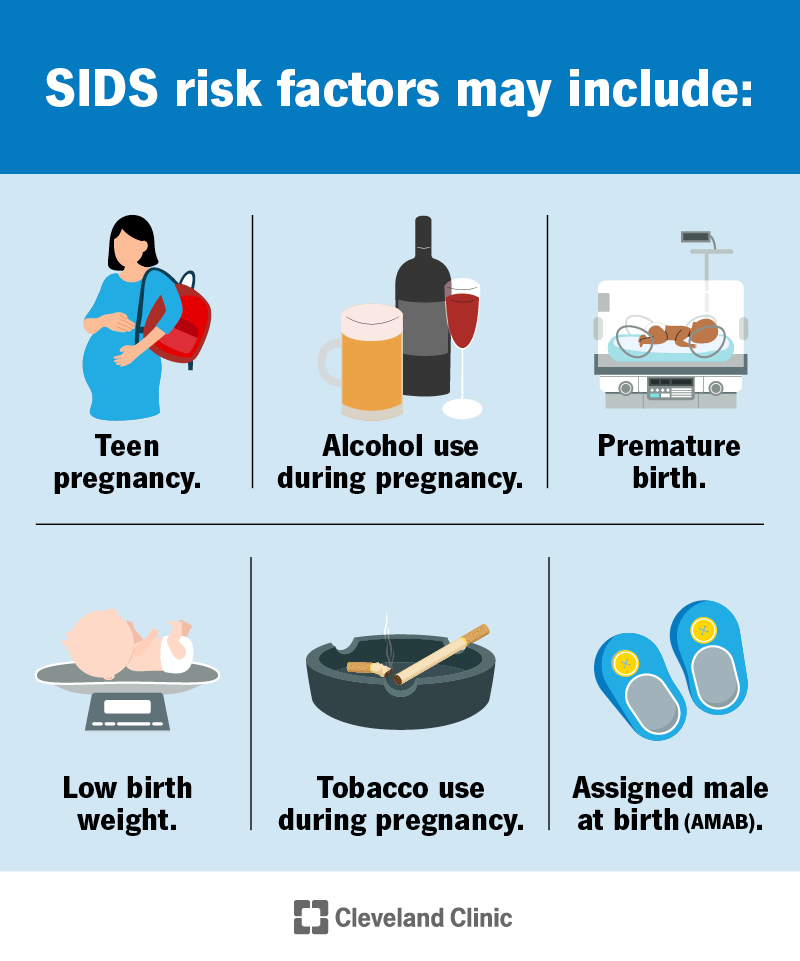
- 16 Oct 2025
In News:
- Sudden Infant Death Syndrome (SIDS) refers to the sudden, unexplained death of an infant below one year of age, even after thorough medical investigation, including autopsy, review of medical history, and examination of the death environment.
- It is a major contributor to infant mortality globally, and October is observed as SIDS Awareness Month to promote public understanding and preventive practices.
Epidemiology and Vulnerable Age Group
- Most SIDS cases occur between 2 to 4 months of age, and around 90% of incidents occur before six months. While it can happen at any time, cases most commonly occur during sleep, typically between midnight and early morning hours. Slightly more male infants are affected compared to females.
- SIDS is the leading cause of death in infants aged 1 month to 1 year in countries like the United States, with approximately 2,500 infant deaths annually.
Understanding SIDS and SUID
SIDS forms part of a broader category termed Sudden Unexpected Infant Death (SUID), which encompasses all sudden infant deaths, including those with clear causes (such as suffocation) and those without identified causes. About half of SUID cases are attributed specifically to SIDS.
Risk Factors and Possible Mechanisms
Although SIDS remains medically unexplained, research suggests a combination of biological vulnerability and environmental triggers during a critical developmental period. Proposed mechanisms include immaturity of the brain regions regulating breathing, heart rate, temperature, and arousal from sleep, as well as possible genetic predisposition.
Recognised risk factors include:
- Premature birth and low birth weight
- Exposure to tobacco smoke or alcohol during pregnancy
- Unsafe sleep environment or sleeping position
- Lack of prenatal care
- Overheating during sleep
- Teenage pregnancy
- Male sex
- Sibling history of SIDS
- Being a twin
- History of apnea episodes
Importantly, vaccines do not cause SIDS; recent studies indicate that timely vaccination may actually reduce SIDS risk by up to 50%.
Prevention and Safe-Sleep Guidelines
While SIDS cannot always be prevented, certain practices can significantly reduce risk. Key recommendations include:
- Always place infants on their backs for sleep.
- Use a firm, flat sleep surface with only a fitted sheet.
- Avoid loose bedding, pillows, toys, and crib bumpers in the sleep area.
- Have the baby sleep in the same room but not the same bed for at least the first six months.
- Avoid smoking, alcohol, and drug exposure during and after pregnancy.
- Maintain a cool sleeping environment and avoid overheating.
- Breastfeeding and the use of pacifiers are associated with reduced risk.
- Stop swaddling once the infant can roll over.
- Provide supervised tummy time while the infant is awake to promote development and prevent flat-head syndrome.
Consumer devices marketed to prevent SIDS, such as breathing monitors, have no proven benefit in preventing deaths.
Crew Escape System
- 16 Oct 2025
In News:
- India’s human spaceflight programme, Gaganyaan, places paramount emphasis on astronaut safety. To achieve this, ISRO has developed a dedicated Crew Escape System (CES) — a rapid emergency mechanism designed to protect astronauts during the most critical phase of a mission: launch and atmospheric ascent.
- Recently, ISRO also developed a cost-effective single-stage test vehicle powered by the Vikas engine specifically to validate this escape system during flight trials.
Purpose and Importance
- In human space missions, crew safety takes priority over mission success. During launch and the initial ascent through the dense atmosphere, the launch vehicle experiences extreme stresses and accelerates to hypersonic speeds. Any malfunction at this stage — especially with rockets using solid boosters that cannot be shut down once ignited — demands immediate crew evacuation.
- The CES is engineered to rapidly detach the crew module from the launch vehicle in the event of an anomaly and move it to a safe distance within seconds.
How the Crew Escape System Works
The Crew Escape System is mounted on the forward end of the rocket and consists of multiple high-burn-rate solid motors that generate more thrust than the launch vehicle, ensuring faster acceleration of the escape module. Once activated, the CES pulls the crew module away, safely distancing it from the failing rocket.
After separation:
- The escape system detaches from the crew module
- A multistage parachute system deploys
- The module gradually decelerates
- Astronauts splash down safely in the sea
Throughout this sequence, the crew remains inside the pressurised module until recovery.
Decision-Making & Safety Systems
- Activation of the CES is controlled by the Integrated Vehicle Health Management (IVHM) system. This network of sensors, software and diagnostics continuously monitors launch vehicle performance and crew module health in real time.
- It detects anomalies, filters out false alarms, and triggers the escape sequence instantly if required.
Types of Crew Escape Systems
Crew escape mechanisms follow two broad designs:
- Puller type — used in Gaganyaan, where the system pulls the crew module away using high-thrust solid motors. Similar systems were used in the U.S. Saturn V, Russia’s Soyuz, and China’s Long March missions.
- Pusher type — used in systems like SpaceX Falcon-9, where small liquid-fuel engines push the spacecraft away.
ISRO adopted the puller-type design due to its proven reliability in high-stress atmospheric escape scenarios.
Impatiens Rajibiana
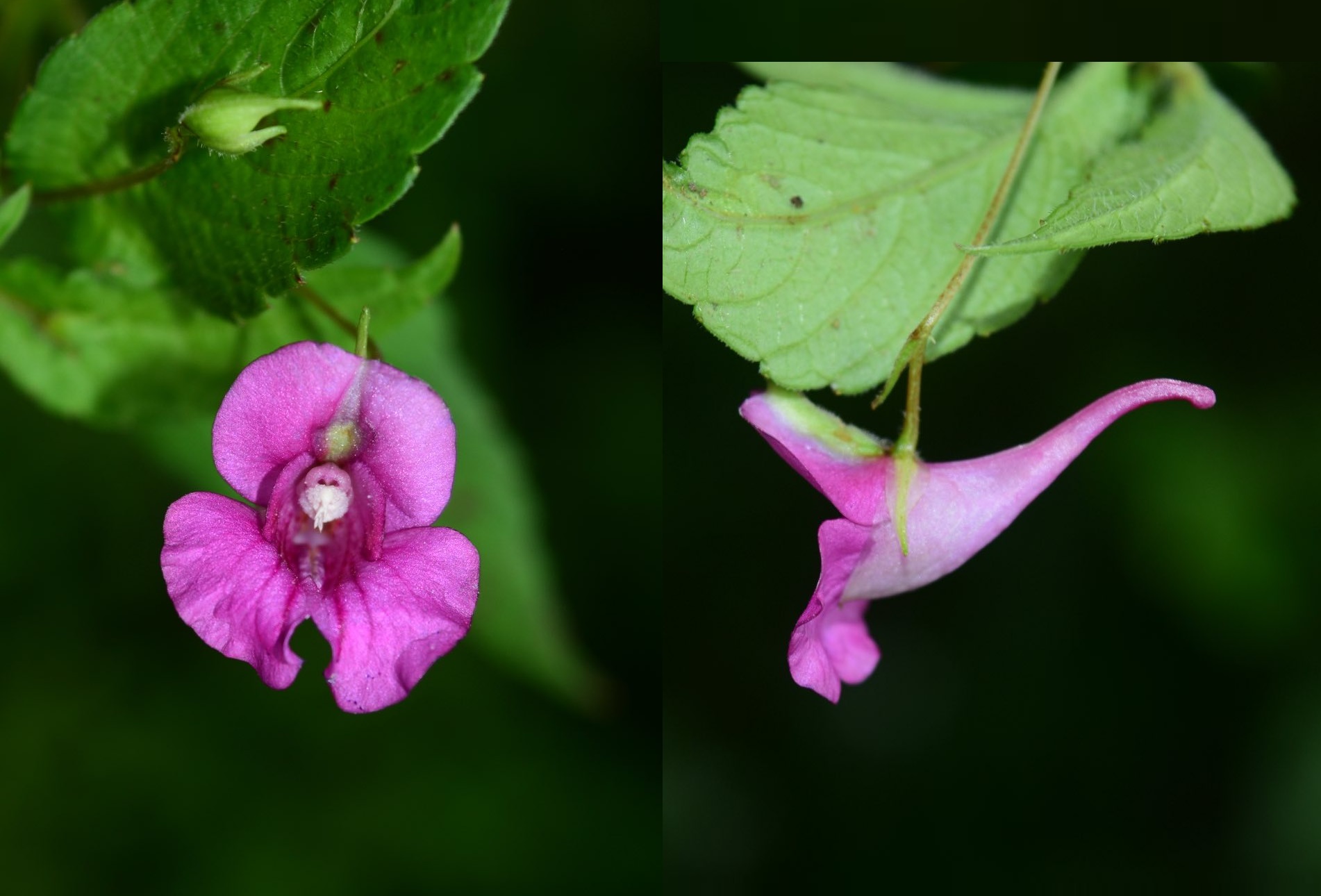
- 16 Oct 2025
In News:
A team from the Botanical Survey of India (BSI) has identified a new species of balsam flower named Impatiens rajibiana in Arunachal Pradesh. The discovery was made in the natural forest areas of Shergaon, West Kameng district, highlighting the region’s rich floral biodiversity.
Key Details and Ecological Significance
- Impatiens rajibiana belongs to the Balsaminaceae family, commonly known as balsams.
- The species was located in moist, shaded habitats at an elevation of over 2,000 metres, indicating its preference for cool, humid, high-altitude forest ecosystems.
- Balsams are known for their delicate flowers and high levels of endemism, often restricted to narrow ecological zones.
- India currently hosts around 230 species of balsams, including the widely known Impatiens balsamina (garden balsam or touch-me-not).
- Arunachal Pradesh has emerged as a hotspot for balsam diversity. Between 2013 and 2017, more than 16 new species of Impatiens were documented from the state, such as Impatiens godfreyi and Impatiens sashinborthakurii, reinforcing the Eastern Himalayas’ status as a key centre of plant discovery.
Conservation Relevance
- The discovery of Impatiens rajibiana underlines the ecological value of the Eastern Himalayan region and the need for continued field surveys and conservation.
- As many balsam species have restricted distribution and small populations, they may be vulnerable to habitat disturbances, climate change, and anthropogenic pressures.
- Protecting fragile mountain ecosystems and promoting biodiversity research remain critical for safeguarding endemic plant species like Impatiens rajibiana.
Astra Mark 2 Missile
- 16 Oct 2025
In News:
- India is set to make a major leap in its air-to-air weapon capability with the Defence Research and Development Organisation (DRDO) upgrading the Astra Mk-2 air-to-air missile.
- The missile’s range is being extended to beyond 200 kilometres, marking a significant improvement over earlier versions and positioning India among the few nations with such long-range Beyond Visual Range (BVR) missile technology.
- This upgrade is part of India’s broader push towards defenceindigenisation under the Aatmanirbhar Bharat vision.
Importance and Context
- The Astra programme reflects India's commitment to reducing dependence on foreign defence systems, strengthening self-reliance, and enhancing air superiority capabilities.
- The Astra Mk-1, with a range of around 90–110 km, has already been successfully inducted by the Indian Air Force (IAF) and proven operationally, including during Operation Sindoor.
- The Mk-2 variant, now under advanced development, will boost India's long-range interception capability, enabling IAF aircraft to engage enemy targets from well outside hostile air defence zones—an essential capability in modern aerial combat.
Key Features and Technological Advancements
- The Astra Mk-2 will be an extended-range, next-generation BVR missile capable of striking targets over 200 km away.
- It will employ a dual-pulse solid rocket motor, which provides an initial burst of acceleration followed by a second ignition phase for enhanced end-game manoeuvrability and precision. This propulsion design ensures higher terminal speed and greater accuracy compared to single-pulse missiles.
- The missile is expected to fly at speeds close to Mach 4.5 and will be equipped with a fully indigenous Radio Frequency (RF) seeker, fibre-optic gyroscopes, and advanced electronic countermeasure (ECM) resistance, making it highly effective in electronic warfare environments.
- Physically, the missile will be larger and heavier than its predecessor, with an estimated diameter of around 190 mm and a weight of approximately 175 kg. Its enhanced aerodynamic design will allow superior range and altitude engagement.
Operational Deployment and Strategic Impact
- Following successful development and testing, the Astra Mk-2 will be integrated with frontline fighter jets such as the Sukhoi-30MKI and LCA Tejas. The IAF plans to procure an initial stock of nearly 700 missiles, ensuring high operational availability.
- The missile’s extended range capability will serve as a key deterrent against regional adversaries. It is viewed as a counter to China’s PL-15, and it significantly surpasses Pakistan’s PL-15E, which has a maximum range of around 145 km. This enhancement will allow Indian pilots to neutralise hostile aircraft long before they pose a threat.
Live Cases Dashboard of the Legal Information Management and Briefing System (LIMBS)

- 16 Oct 2025
In News:
The Union Minister of State (Independent Charge) for Law and Justice recently inaugurated the Live Cases Dashboard under the Legal Information Management and Briefing System (LIMBS) at Shastri Bhawan, New Delhi. This marks a key advancement in the government's efforts to enhance transparency, efficiency, and coordination in legal case management.
About the Live Cases Dashboard
- A digital interface providing real-time visualisation of court cases involving the Government of India.
- Displays upcoming hearings — particularly cases scheduled within the next seven days — across the Supreme Court, High Courts, and other judicial bodies.
- Enables proactive decision-making and inter-ministerial coordination, helping departments prepare timely responses.
About LIMBS
- Web-based application designed to monitor litigation where the Union of India is a party.
- Launched for central ministries, departments, CPSUs and autonomous bodies in 2016, with a major upgrade in January 2020.
- Operates under the Department of Legal Affairs, Ministry of Law & Justice.
- Allows 24x7 access to government officials, advocates, arbitrators, nodal officers, and ministry users to upload and track case information.
- Offers a dashboard-based system providing a snapshot of legal matters to each stakeholder institution.
Significance
- The Government of India remains one of the largest litigants.
- LIMBS and its Live Cases Dashboard aim to reduce litigation burden in line with the vision of “Minimum Litigation, Maximum Governance”.
- Enhances transparency, accountability, and judicial efficiency.
- Promotes data-driven governance, timely legal response, and improved public resource management.
Blue Flag Certification
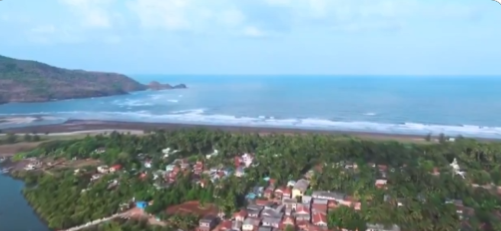
- 15 Oct 2025
In News:
- Five beaches in Maharashtra have recently been awarded the prestigious Blue Flag certification, a global eco-label that recognises high standards in environmental management, cleanliness, and sustainable tourism.
- The certified beaches include Shrivardhan and Nagaon (Raigad district), Parnaka (Palghar), and Guhagar and Ladghar (Ratnagiri district). The announcement was made by the state government, marking a significant achievement in coastal conservation and eco-tourism promotion.
About Blue Flag Certification
The Blue Flag is an internationally recognised eco-label awarded by the Foundation for Environment Education (FEE), Denmark. Established in France in 1985 and expanded globally in 2001, it is regarded as one of the world's most prestigious voluntary awards for beaches, marinas, and sustainable tourism boats.
Criteria and Objectives
To receive the Blue Flag, sites must meet 33 stringent criteria across key focus areas:
- Water quality
- Environmental management
- Environmental education and awareness
- Safety and essential services
The certification aims to promote sustainable development in coastal and freshwater ecosystems by ensuring high cleanliness standards, protecting natural habitats, and encouraging responsible tourism practices. Its mission centers on environmental education, conservation, and sustainable tourism development.
Blue Flag Beaches in India
With the addition of the five Maharashtra beaches, India continues to expand its presence on the global sustainable tourism map. Previously recognised Indian Blue Flag beaches include:
- Shivrajpur (Gujarat)
- Ghoghla (Diu)
- Kasarkod and Padubidri (Karnataka)
- Kappad (Kerala)
- Rushikonda (Andhra Pradesh)
- Golden Beach (Odisha)
- Radhanagar (Andaman & Nicobar)
- Kovalam (Tamil Nadu)
- Eden (Puducherry)
- Minicoy Thundi and Kadmat (Lakshadweep)
Significance
This recognition underscores India's ongoing efforts to align coastal tourism with global environmental standards, enhance beach amenities, and promote eco-friendly tourism models. It also strengthens India's initiative to improve coastal governance under programmes like the Integrated Coastal Zone Management Project and the government's broader sustainability mission.
NATO’s ‘Steadfast Noon’ Exercise
- 15 Oct 2025
In News:
NATO is set to conduct its annual nuclear deterrence drill, ‘Steadfast Noon’, with the 2025 edition hosted by the Netherlands. The exercise, a key component of NATO’s nuclear defence strategy, underscores the alliance’s commitment to maintaining credible deterrence capabilities amid evolving global security challenges.
About Steadfast Noon
Steadfast Noon is a long-standing annual nuclear readiness exercise conducted by the North Atlantic Treaty Organization (NATO). It serves as a crucial test of the alliance’s nuclear deterrence procedures, operational coordination, and preparedness to defend member states against strategic threats.
Key Features
- Host Country (2025): Netherlands
- Main Operating Base:Volkel Air Base, Netherlands
- Additional Bases:KleineBrogel (Belgium), Lakenheath (UK), Skrydstrup (Denmark)
- Participants: 14 NATO nations including the U.S., Germany, Poland, Finland, Belgium, the UK, the Netherlands, and Denmark
- Aircraft Involved: ~70–71 aircraft, including dual-capable fighter jets like the German Tornado and U.S./Dutch F-35s
- Nature of Exercise: Training for nuclear-mission capable aircraft — no live nuclear weapons are carried or flown
Dual-capable aircraft are equipped to deliver both conventional and nuclear payloads, making this exercise significant for testing operational flexibility and readiness.
Purpose and Strategic Context
The exercise is intended to:
- Validate operational procedures for NATO’s nuclear deterrent
- Strengthen coordination among allied air forces
- Signal commitment to collective defence under Article 5 of the NATO Treaty
- Deter adversaries by demonstrating credible nuclear readiness
Non-Participation of France
France does not take part in Steadfast Noon as it maintains an independent nuclear command and does not integrate its nuclear forces into NATO’s command-and-control system.
Armenia Joins IUCN
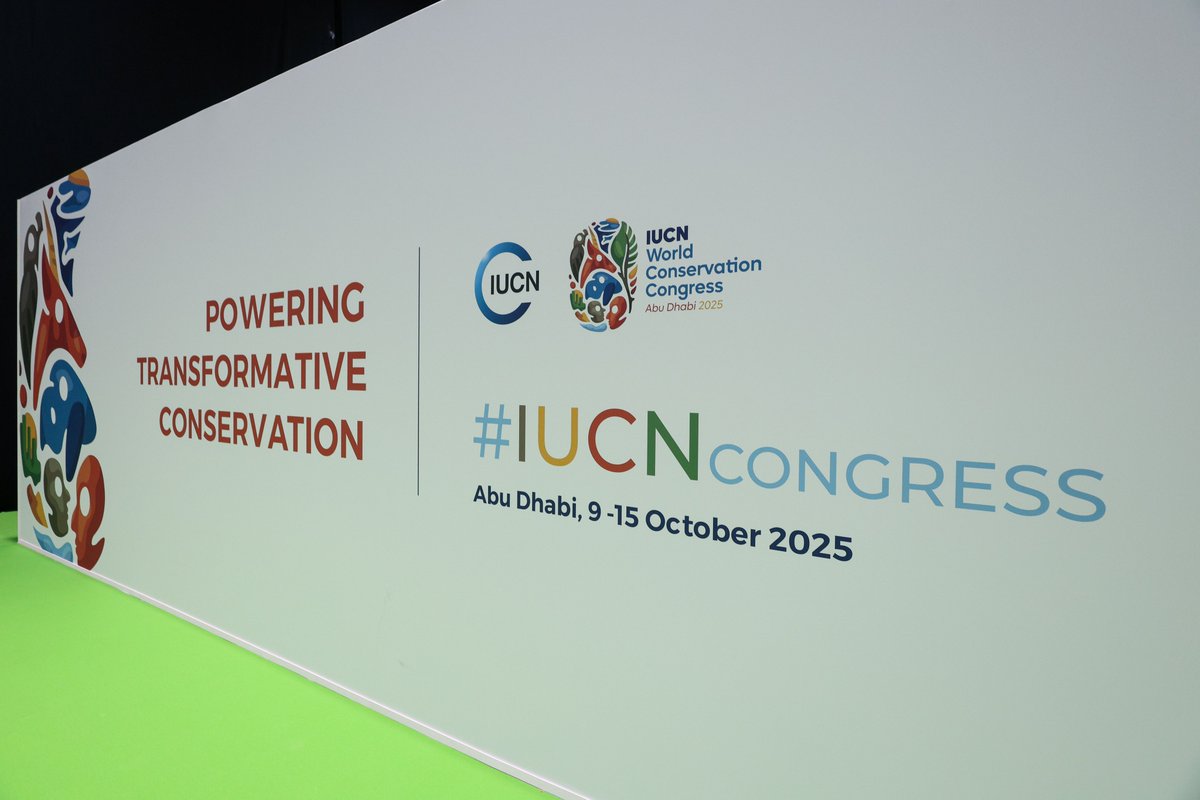
- 15 Oct 2025
In News:
Armenia has recently become the newest State Member of the International Union for Conservation of Nature (IUCN), marking a key milestone in its environmental policy direction. The announcement was made at the IUCN World Conservation Congress in Abu Dhabi, reflecting Armenia’s growing commitment to global biodiversity protection, sustainable development, and alignment with international conservation frameworks.
Significance of Membership
By joining IUCN, Armenia gains access to global research, conservation tools, and international collaborations. This step also supports its preparations to host COP17 of the Convention on Biological Diversity in 2026, signalling its intent to play a leadership role in global biodiversity discussions.
IUCN leadership has welcomed Armenia’s membership, noting that it aligns with the country’s efforts to expand protected areas, restore degraded ecosystems, and bring its environmental laws in line with international standards.
Armenia’s Biodiversity and Conservation Efforts
Situated at the crossroads of Europe and Asia, Armenia hosts varied ecosystems—from alpine meadows and mountain forests to semi-deserts and freshwater bodies. These habitats support several threatened and endemic species, including:
- Caucasian leopard (Critically Endangered)
- Bezoar goat
- Sevan trout, native to Lake Sevan
The country has made progress in environmental governance through initiatives such as its National Biodiversity Strategy and Action Plan and the Red Book of Armenia. Its conservation agenda includes forest restoration across 12.9% of its territory by 2030, strengthening biodiversity monitoring, and expanding protected areas.
Geographical and Environmental Profile of Armenia
- Location: Southern Caucasus; landlocked
- Borders: Georgia (north), Azerbaijan (east), Iran (southeast), Turkey (west)
- Terrain: Dominated by the Lesser Caucasus Mountains; volcanic soils rich in nitrogen, potash, phosphates
- Highest Peak:Mount Aragats (4,090 m)
- Climate: Highland continental — hot summers, cold winters
- Rivers: Aras, Hrazdan, Arpa, Vorotan — key for irrigation and hydropower
- Major Lake:Lake Sevan, Armenia’s largest freshwater body
- Resources: Small deposits of copper, gold, molybdenum, zinc, bauxite
- Capital & Language: Yerevan; Armenian
LEAPS 2025
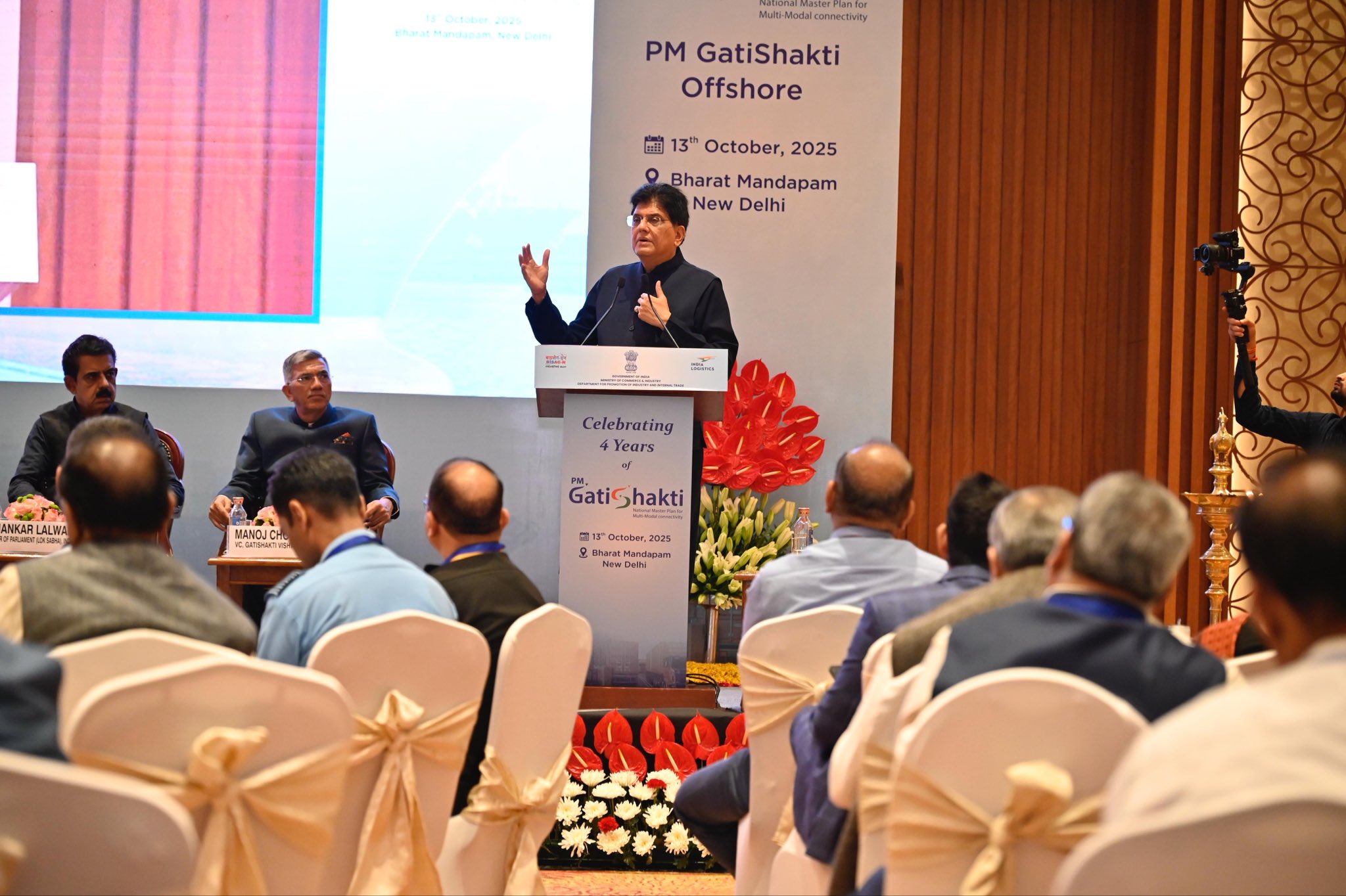
- 15 Oct 2025
In News:
The Union Minister for Commerce and Industry recently launched the Logistics Excellence, Advancement, and Performance Shield (LEAPS) 2025 in New Delhi, marking a major initiative to accelerate reforms and innovation in India’s logistics ecosystem. The launch also coincided with the 4th anniversary of the PM GatiShakti initiative, reaffirming the government’s commitment to building an efficient, integrated, and future-ready logistics network.
About LEAPS 2025
LEAPS 2025 is a flagship programme of the Department for Promotion of Industry and Internal Trade (DPIIT) under the Ministry of Commerce and Industry. It seeks to benchmark logistics excellence across the country by recognising outstanding performance, leadership, and innovative practices within the logistics sector.
Objectives
- Promote global-standard logistics performance and efficiency
- Strengthen competitiveness in line with the National Logistics Policy (NLP)
- Encourage sustainability and ESG-centric logistics models
- Foster collaboration among Government, Industry, and Academia
- Support Make in India, Atmanirbhar Bharat, and the vision of Viksit Bharat 2047
Key Focus Areas
- Logistics innovation and technology adoption
- Green logistics and sustainable supply chain practices
- Ease of movement through multimodal connectivity
- Capacity building and skilling in logistics and supply chain management
Coverage and Award Categories
The initiative spans a wide spectrum of logistics stakeholders, including:
- Freight operators (air, road, maritime, and rail)
- Multimodal transport operators
- Industrial, consumer, and agricultural warehousing firms
- MSMEs and logistics start-ups
- Academic and training institutions
- E-commerce logistics service providers
- Third-party and freight forwarding operators
A total of 13 award categories have been introduced, targeting core logistics, MSMEs, start-ups, institutions, and special service providers. Registrations are open on the RashtriyaPuraskar Portal until 15 November 2025.
Alignment with National Logistics Vision
LEAPS 2025 builds on the strategic framework of the National Logistics Policy (2022) and PM GatiShakti, which aims to integrate road, rail, air, and waterways to reduce logistics costs and improve last-mile connectivity. PM GatiShakti—backed by a ?100-trillion multi-modal infrastructure development vision—addresses infrastructure gaps, optimises multimodal movement, and strengthens India’s position in global supply chains.
Significance
- Boosts logistics efficiency and transparency
- Encourages innovation and technology in supply chain operations
- Strengthens export readiness and reduces logistics costs
- Promotes sustainable logistics and environmental stewardship
- Enhances India's competitiveness in global trade
Virtual Museum of Stolen Cultural Objects
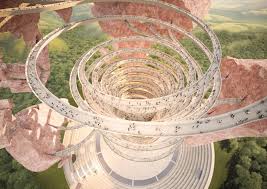
- 15 Oct 2025
In News:
Recently, UNESCO launched the world’s first Virtual Museum of Stolen Cultural Objects during the MONDIACULT 2025 Conference. This global digital initiative marks a vital step in protecting cultural heritage, raising awareness about illicit trafficking, and facilitating the return of stolen artefacts to their countries of origin.
Key Features and Objectives
The virtual museum serves as an immersive digital platform reconnecting community with cultural treasures lost to theft, smuggling, and colonial-era plundering. Unlike traditional museums, its purpose is not to accumulate artefacts but to systematically empty itself by aiding restitution efforts. Visitors can explore high-resolution 2D and 3D reconstructions of objects, along with contextual history and cultural significance.
The project contributes to the goals of UNESCO’s 1970 Convention on preventing illicit trafficking of cultural property and aligns with a recent UN General Assembly resolution urging stronger international cooperation to restore stolen heritage.
Institutional Framework
- Developed by UNESCO in collaboration with INTERPOL
- Financially supported by Saudi Arabia; additional contribution from the United States
- Announced earlier at MONDIACULT 2022 and launched in September 2025
- Currently displays ~240 missing cultural objects from 46 countries
- Represents diverse cultural forms: manuscripts, sculptures, ritual objects, architectural fragments, artworks, coins, and archaeological finds
The digital experience is designed like a baobab tree, symbolizing resilience and interconnectedness, created by renowned Burkinabe architect Francis Kéré. The platform includes:
- Gallery of Stolen Objects
- Auditorium
- Return & Restitution Room, highlighting successful repatriation stories
India’s Contribution and Significance
Three culturally significant Indian artefacts are showcased:
- 9th-century sandstone sculptures of Nataraja and Brahma from Mahadev Temple, Pali (Chhattisgarh)
- Stone sculpture of Bhairava (undated)
These items reflect India’s rich temple heritage and spiritual aesthetic. Their listing reinforces India’s continuing struggle against antiquities smuggling.
India has intensified its efforts to recover stolen heritage in recent years. Since 2014, over 600 antiquities have been brought back to India. The leadership has repeatedly emphasized ethical cultural restitution, with an official stance that “no museum should hold artefacts acquired unethically.”
Global and Youth Focus
The platform especially targets youth and digital natives, using interactive storytelling to:
- Promote cultural sensitivity
- Highlight community identities tied to artefacts
- Encourage global cooperation on heritage protection
Mission for Aatmanirbharta in Pulses (2025–26 to 2030–31)
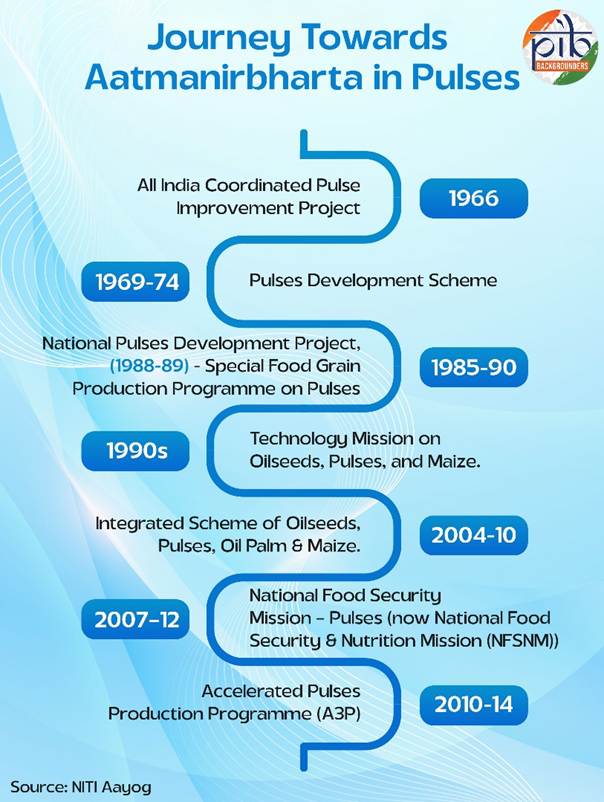
- 14 Oct 2025
In News:
- India has launched an ambitious Mission for Aatmanirbharta in Pulses (2025–26 to 2030–31),signalling a major push toward self-sufficiency in pulses and farmer-centric agricultural transformation.
- Announced during a special programme at the Indian Agricultural Research Institute (IARI), the Mission carries an outlay of ?11,440 crore and aims to meet India’s pulses requirement entirely through domestic production by December 2027.
- Pulses hold strategic importance for India as they ensure nutritional security, enrich soil through nitrogen fixation, support rural livelihoods, and reduce import bills. Despite being the world’s largest producer and consumer, India's demand-supply gap has led to significant imports—47.38 lakh tonnes in 2023-24. The Mission seeks to eliminate this dependence and strengthen farmer income security.
Key Targets (by 2030–31)
- Total production:350 lakh tonnes
- Cultivation area:310 lakh hectares (including 35 lakh ha rice fallows)
- Yield target:1,130 kg/ha
- Beneficiaries: Nearly 2 crore farmers
- Import elimination by Dec 2027
Core Components of the Mission
Seed & Technology Push
- 126 lakh quintals of certified seeds
- 88 lakh free seed kits
- Deployment of high-yielding, pest-resistant, climate-resilient varieties
- Launch of SATHI Portal (Seed Authentication, Traceability & Holistic Inventory) for seed lifecycle transparency
Assured MSP & Farmer Security
- 100% procurement of Tur, Urad, and Masoor for four years
- Procurement support via NAFED & NCCF
- Linked to PM-AASHA for guaranteed price support and reduced market risk
Cluster-Based Integrated Approach
- "One Block – One Seed Village" model
- FPO-driven clusters to streamline seed production & marketing
- Mechanization, soil health management, and balanced fertilization
- Agronomy support from ICAR, KVKs & state agriculture departments
Value Chain Strengthening
- 1,000 processing & packaging unitsincentive: up to ?25 lakh per unit
- Focus on storage, processing, branding, and market linkages
Social and Nutrition Focus
- Inclusion of pulses in PDS, ICDS, Mid-Day Meal schemes
- Strengthening food-based welfare with protein security
NITI Aayog Recommendations Integrated
- Expansion into rice fallows
- Cluster-based cultivation & seed hubs
- “One Block–One Seed Village”
- Data-driven monitoring through SATHI
- Public procurement strengthening at grassroots
- Climate-resilient, short-duration pest-resistant varieties
Strategic Significance
- Supports Vision 2047&Viksit Bharat
- Strengthens food sovereignty & rural employment
- Saves foreign exchange by cutting pulse imports
- Enhances soil fertility & climate resilience
- Boosts farmer incomes and reduces agrarian vulnerability
IUCN Kenton Miller Award 2025
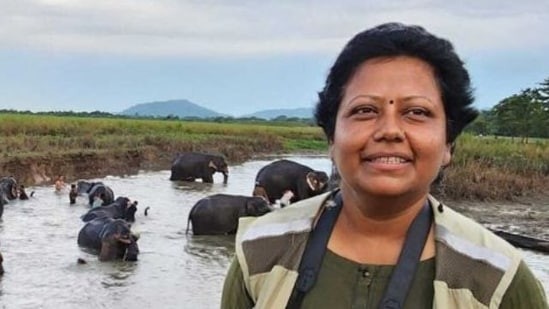
- 14 Oct 2025
In News:
India has achieved a landmark moment in global conservation as Dr. Sonali Ghosh, Field Director of Kaziranga National Park and Tiger Reserve (Assam), became the first Indian to receive the prestigious IUCN WCPA Kenton Miller Award 2025. The honour was announced at the IUCN World Conservation Congress in Abu Dhabi, highlighting India’s rising leadership in biodiversity governance and protected-area innovation.
About the IUCN Kenton Miller Award
- Instituted: 1999
- Presented by:IUCN World Commission on Protected Areas (WCPA)
- Named after: Dr. Kenton R. Miller, eminent conservationist & former IUCN Director-General
- Purpose:Recognisesoutstanding innovation and excellence in the sustainability and governance of protected areas
- Eligibility: Protected-area managers, researchers, community/indigenous conservation practitioners
- Award Components:
- USD 5,000 grant
- Global citation
- Sponsored participation at the IUCN Congress
Significance of Dr. Ghosh’s Contribution
Dr. Ghosh has been awarded for pioneering inclusive and sustainable protected-area management across the Kaziranga-Orang-Manas landscape. Key initiatives include:
- Community-centric conservation: Empowering local and indigenous communities as co-stewards
- Eco-tourism models: Ensuring livelihood security while safeguarding biodiversity
- Anti-poaching and habitat security: Strengthening surveillance and ecological connectivity
- Gender inclusion: Promoting women’s participation in frontline conservation forces
Her leadership reflects India’s approach to biodiversity protection through grassroots participation, science-based governance, and livelihood integration.
Broader Context: India at the IUCN Congress
At the Congress, India reiterated its commitment to global environmental cooperation. Union Minister Kirti Vardhan Singh engaged with international delegates and IUCN leadership on advancing shared conservation goals, reinforcing India's stance as a proactive global environmental actor.
About IUCN and the World Conservation Congress
- Founded: 1948
- HQ: Switzerland
- Global network of governments, NGOs, and experts from 160+ countries
- World Conservation Congress: Held every four years to set global biodiversity priorities
Previous Winner (2023)
- Maria del Carmen Garcia Rivas (Mexico) – Honoured for community-led management of marine protected areas.
International Purple Fest 2025
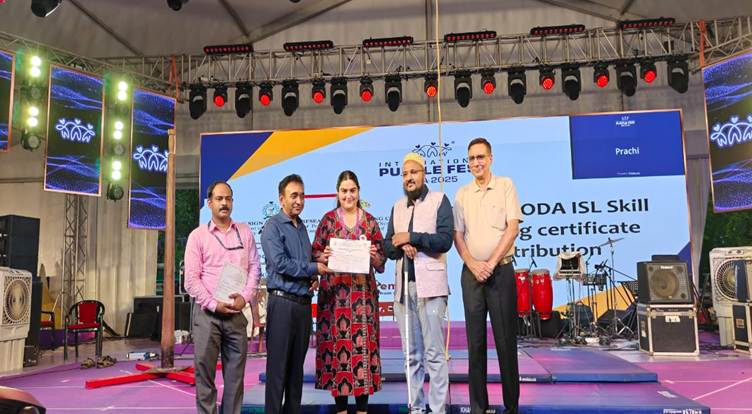
- 14 Oct 2025
In News:
- The International Purple Fest 2025, held in Goa reaffirmed India’s commitment to disability inclusion, accessibility, and empowerment.
- Organized by the Department for Empowerment of Persons with Disabilities (DEPwD) in partnership with the State Commissioner for Persons with Disabilities, Government of Goa, the Ministry of Social Justice & Empowerment, and United Nations India, the Fest promoted the vision of “Inclusion as a Movement.”
- The event positioned inclusive thinking and universal design as the foundation for education, skilling, and social participation of persons with disabilities (PwDs).
Key Initiatives Launched
1. IELTS Training Handbook for Persons with Disabilities
- Developed by Believe in the Invisible (BITI) with DEPwD support
- Authored by Anjali Vyas, British Council-certified trainer
- India’s first comprehensive accessible IELTS guide for candidates with visual, hearing, locomotor, and other disabilities
- Features:
- Step-by-step learning modules, skill-building tools, and lesson plans
- Accessible practice exercises, time-management support, grammar and vocabulary tips
- Integrated Indian Sign Language (ISL) video links
- Objective: Promote equitable access to global education and skill mobility
2. RPL Certification in ISL Interpretation
- Conducted by Indian Sign Language Research and Training Centre (ISLRTC) under the Skill Training Initiative of DEPwD
- Trained and evaluated SODA (Siblings of Deaf Adults) and CODA (Children of Deaf Adults) from across India
- First batch completed in August 2025, certificates to be awarded on 3 December 2025 (International Day of PwDs)
- Significance: Expands India’s certified ISL interpreter pool and formalizes community-based linguistic skills
3. Specialized Training in American & British Sign Languages
- One-month programme by ISLRTC commencing 3 December 2025
- Focus: Fundamentals of American Sign Language (ASL) and British Sign Language (BSL) — grammar, syntax, vocabulary
- Aim: Provide international exposure to Indian ISL professionals and enhance global employment opportunities
Significance
- Strengthens the National Education Policy’s inclusion mandate
- Builds skilled interpreters to meet growing demand in education, healthcare, public services, and courts
- Promotes disability-inclusive skilling aligned with the Rights of Persons with Disabilities Act, 2016
- Enhances India’s visibility in global disability rights discourse
Operation Golden Sweep
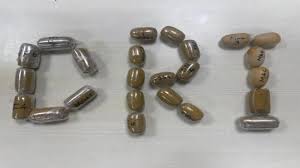
- 14 Oct 2025
In News:
The Directorate of Revenue Intelligence (DRI) has successfully dismantled a sophisticated international gold smuggling syndicate through “Operation Golden Sweep” at Mumbai’s Chhatrapati Shivaji Maharaj International Airport. The enforcement action, based on precise intelligence inputs, reflects India’s strengthened efforts to curb illicit financial flows and protect economic security.
Key Highlights
- Gold Seized: 10.488 kg of 24-carat gold
- Estimated Value: ?12.58 crore
- Arrests: 13 individuals — including foreign nationals (Bangladesh & Sri Lanka), airport staff, handlers, and the key mastermind
- Objective: Disrupt organised smuggling networks that erode foreign exchange reserves and threaten national security
Modus Operandi
The syndicate used an advanced and covert smuggling technique:
- Transit passengers flying from Dubai to Singapore, Bangkok, and Dhaka, routing via Mumbai, served as carriers
- Gold was concealed in egg-shaped wax capsules internally
- On arrival, gold was discreetly handed to complicit airport personnel within the international departure zone
- Airport insiders then smuggled the gold out and delivered it to handlers, who coordinated with the mastermind based in Mumbai and Dubai
This exposure underscores a rising insider threat in critical aviation infrastructure, where organised networks exploit privileged access.
Significance of the Operation
- Demonstrates DRI’s intelligence-driven enforcement, rapid execution, and inter-agency coordination
- Highlights evolving trade-based and route-based smuggling tactics
- Reinforces India's commitment to financial integrity, supply-chain security, and national economic interests
IUCN World Heritage Outlook 2025
- 14 Oct 2025
In News:
- The IUCN World Heritage Outlook 4, to be launched at the IUCN World Conservation Congress 2025 in Abu Dhabi, represents the world’s most comprehensive periodic evaluation of the conservation status of UNESCO natural and mixed World Heritage Sites.
- Conducted every 3–5 years by the International Union for Conservation of Nature (IUCN) and the World Commission on Protected Areas (WCPA), it provides an independent, transparent assessment of protection efforts, threats, and future prospects for these globally significant ecosystems.
Purpose and Significance
The Outlook functions as a global conservation barometer designed to:
- Monitor the state of conservation of natural World Heritage Sites
- Highlight exemplary site management and transfer of best practices
- Provide early warnings for ecological degradation and governance failures
- Bridge data gaps through expert-led evaluation and advanced monitoring tools
- Showcase the societal and ecological benefits of natural heritage, including livelihoods, disaster resilience, and carbon storage
This mechanism complements UNESCO’s statutory monitoring under the 1972 World Heritage Convention, strengthening global efforts to realize the Kunming–Montreal Global Biodiversity Framework (KM-GBF) targets by 2030.
Global Conservation Outlook: Key Findings (2025)
- ~65% of sites show stable or improving health since 2020, reflecting enhanced governance and restoration actions. Example: Galápagos Islands, Yellowstone National Park
- Over 80% of sites face direct climate threats—coral bleaching, glacier retreat, wildfires. Example: Great Barrier Reef
- ≈60% experience pressures from invasive species, habitat loss, and unsustainable resource use
- Marine sites like Komodo National Park (Indonesia) and Aldabra Atoll (Seychelles) show progress through sustainable tourism and science-based management
- Technology integration (AI, satellite mapping, eDNA) is improving real-time monitoring. Example: AI-enabled wildlife tracking in Okavango Delta
- Around 15 sites have moved into the Danger List due to conflict, pollution, and climate impacts
- Natural World Heritage sites hold ~10% of global terrestrial carbon, underlining their climate role
Natural World Heritage: Global Profile (2024)
- 271 sites with natural Outstanding Universal Value
- 231 natural, 40 mixed
- 22% of all World Heritage properties (1,223 total)
- Over 470 million hectares protected across land and sea
- Represent ~8% of global protected area coverage
- Spread across 115 countries
- Africa: 47
- Asia-Pacific: 85
- Europe & North America: 83
- Latin America & Caribbean: 47
- Arab region: 9
- 18 transboundary sites; 15 in Danger List
India: Trends and Insights
India hosts 7 natural and mixed World Heritage Sites, spanning the Himalayas to coastal wetlands, constituting ~1.5% of global natural WH coverage.
Positive developments
- Kaziranga&Manas: Improved biodiversity and anti-poaching success through community stewardship and regulated ecotourism
Sites of concern
- Sundarbans: Declining mangroves due to salinity rise, cyclones, and sea-level change
- Western Ghats: Pressures from mining, infrastructure, and land-use conflicts
- Nanda Devi & Great Himalayan National Park: Glacial melt and invasive species affecting Himalayan watersheds
Policy support
- Wildlife (Protection) Amendment Act, 2022
- LiFE Mission for sustainable lifestyles aligned with KM-GBF
- Funding gaps: ~30–40% higher financial allocation needed, especially for marine and transboundary sites
Major Challenges
|
Challenge |
Impact |
|
Climate change |
Coral bleaching, glacial retreat, desertification |
|
Unsustainable development |
Habitat fragmentation, tourism pressure |
|
Funding shortfalls |
Inadequate staffing, weak surveillance |
|
Governance issues |
Overlapping mandates, weak enforcement |
|
Biodiversity data gaps |
Limits adaptive and real-time conservation |
Recommendations
- Climate-resilient planning: Integrate heritage into national climate strategies. Example: Aligning LiFE and National Adaptation Fund with site targets
- Green financing: Carbon credits, biodiversity funds, CSR, eco-investment
UNDP–GEF BIOFIN as model - Local and Indigenous partnership: Community co-management and benefit-sharing. Example: Eco-Development Committees in Manas and Periyar
- Tech-enabled conservation: AI surveillance, remote sensing, eDNA, drones. Example: IUCN Global Ecosystem Atlas initiative
- Transboundary cooperation: Joint research and ecological corridors. Example: India–Nepal Terai Arc Landscape
Viksit Bharat Buildathon 2025
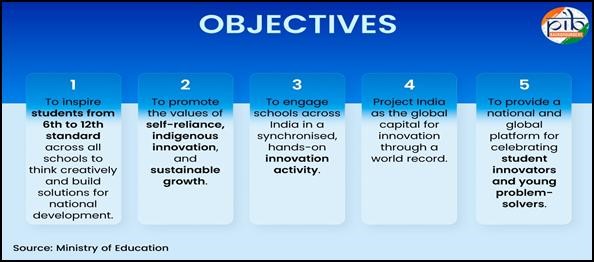
- 13 Oct 2025
In News:
The Viksit Bharat Buildathon 2025 is a nationwide innovation movement being organised by the Department of School Education & Literacy (DoSEL), Ministry of Education, in collaboration with Atal Innovation Mission, NITI Aayog.
- This largest-ever school hackathon aims to strengthen the culture of innovation at the school level by encouraging students to ideate or build prototypes on four themes: Atmanirbhar Bharat, Swadeshi, Vocal for Local, and Samriddh Bharat.
- The Buildathon aims to foster innovation, creativity, and problem-solving among our youth so that they become key drivers of a prosperous, developed, and self-reliant India.
The Buildathon will provide hands-on, experiential learning in line with the National Education Policy (NEP) 2020. Participation is inclusive with special focus on Aspirational Districts, Tribal and Remote Regions.
Key Features
- Dedicated Portal: There is a national portal for registration and submission of final entries (ideas or prototypes)
- Mode of Participation: A team of 3-5 students will participate in the Buildathon and submit entries (ideas/prototypes) in the form of videos. There will be no limit on the number of teams from a school.
- Mentorship Support: Dedicated support will be provided by volunteers and mentors from Incubation Centres, Mentor of Change Network, Higher Education Institutions, and Corporates to help students build their projects at the school level.
- National Live Event: National level virtual live streaming session will be organised, which shall be joined by all schools (6th to 12th standard).
- Global Streaming: The event will be streamed on nationwide news and media channels.
- Inclusive Spotlight: A Special spotlight will be given to schools from Aspirational Blocks, Tribal Regions, Frontier Villages, and Remote Areas.
- District & State-Level Events: Schools will conduct Innovation activities. States are encouraged to organise community level innovation events inviting multiple schools and dignitaries.
- Submission of Entries: Post-event, schools will submit videos of their innovation entries (Ideas or Prototypes).
How to Participate
- Eligibility: Participation is open to all school students from class 6-12, across India. Students must form a team of 3-5 members from same schools. Students can register with the help of their teachers. There is no restriction on the number of teams per school.
- Registration of Team: Schools/teachers have to encourage students to form teams and then register their teams on the official Buildathon portal after which a unique registration ID will be generated for each team. The Registration Link for schools for Viksit Bharat Buildathon is - vbb.mic.gov.in
- Selection of Theme: Each team will need to choose one out of the four Buildathon themes and identify any problem statement.
- Brainstorm & Build: The team will ideate to solve community problems.
- Prepare for Submission: Teams will be required to create a 2–5 minute video explaining the problem it is solving, the innovative solution/prototype they have created, how it works and its possible impact.
- Submission: The project video/ summaries have to be submitted on the Portal within the submission window of Oct. 13 to Oct. 31, 2025
Awards
- A panel of experts will evaluate the entries, and the top student teams will be awarded prizes. These schools and students will receive long-term support through corporate adoption, mentorship, and resources to further strengthen their innovations.
- There will be an Awards Pool of Rs. 1 Crore, with 10 National Level winners, 100 State level winners and 1000 District level winners.
AI for Inclusive Societal Development
- 13 Oct 2025
In News:
- NITI Aayog has released a landmark study titled “AI for Inclusive Societal Development”, shifting India’s artificial intelligence discourse toward the informal workforce, which constitutes the backbone of the national economy. This first-of-its-kind framework seeks to harness AI and frontier technologies to formalise and uplift nearly 490 million informal workers, who contribute around 45% of India’s GDP but remain largely excluded from institutional protections and productivity systems.
- At the core of this initiative is the proposed National Mission “Digital ShramSetu”, conceptualised as a technology-enabled bridge connecting informal workers to formal systems of work, finance, skilling, and social protection — a critical step for achieving the Viksit Bharat 2047 vision.
Mission Digital ShramSetu: Vision & Framework
Objective:To drive large-scale socio-economic inclusion by integrating AI, blockchain, robotics, IoT, AR/VR, and immersive learning into workforce development.
Key Components
|
Pillar |
Purpose |
|
Digital Identity & Trust |
Verifiable worker IDs and credentials for payments, loans, and welfare access |
|
Tech-Enabled Skilling |
Multilingual, adaptive, offline-enabled training for real-world tasks |
|
Blockchain-Based Smart Contracts |
Automated, transparent, dispute-free wage payments |
|
Federated Credentialing |
Real-time validation of skills by government, employers, institutions |
|
Grassroots Outreach |
Collaboration with state bodies and civil society to improve digital literacy and adoption |
|
Apex Governance |
Mission chaired at PM-level with sectoral task forces (agri, healthcare, retail, construction) and state units |
India’s Informal Workforce: Current Realities
- Size: ~490 million workers (≈85% of labour force)
- GDP Share: ~45%
- Productivity: ~USD 5/hour vs national avg. USD 11/hour
- Annual Per Capita Income: ~USD 1,800 (projected USD 6,000 by 2047 if status quo continues; target ≈ USD 14,500)
- Women’s Informal Sector Participation: ~15% (ex-agriculture) vs 37% national avg & 47% global avg
- Social Security Access: ~48%
- Formalisation Vision: Reduce informal sector to 40% by 2047; formalise73.2% of current informal enterprises
Existing Support Tools:e-Shram Portal, PM-JJBY, PM-SYM, Atal Pension Yojana, Micro-lending schemes, Skill India programmes
Challenges Confronting Informal Workers
- Income Instability & Wage Delays: No contracts; reliance on informal credit
- Limited Market Access: Fragmented, unorganised demand; lack of digital presence
- Low Skilling & Tech Adoption: Traditional workflows; language & literacy barriers
- Poor Social Security Coverage: Non-portable records and scheme awareness gaps
- Migrant Vulnerability: No portable credentials or employment networks
- Safety Risks: Hazardous work environments without monitoring support
Institutional & Policy Architecture
- Apex Mission Leadership: PM-level council for policy, funding & coordination
- Sector-Specific Task Forces: Agriculture, construction, healthcare, retail etc.
- State Coordination Units: Local deployment, innovation hubs, adoption drives
- Partnership Ecosystem: Government, industry coalitions (CII, NASSCOM), World Bank, global philanthropies & academia
Why It Matters
The roadmap stresses that technology alone is insufficient; success depends on human-centric deployment, affordability, and multi-stakeholder collaboration. With proactive adoption, India can multiply informal productivity, enhance incomes, reduce vulnerability, and transition toward a high-productivity, high-trust labour economy. Delay, however, could lock millions into low-income traps, weakening India's development trajectory.
Saksham Counter-Unmanned Aerial Threat Grid System
- 13 Oct 2025
In News:
- The Indian Army has initiated induction and fast-track procurement of “SAKSHAM” (Situational Awareness for Kinetic Soft and Hard Kill Assets Management), an indigenously developed, AI-enabled Counter-Unmanned Aerial System (C-UAS) grid created with Bharat Electronics Limited (BEL).
- Designed as a modular Command & Control (C2) backbone, SAKSHAM provides real-time detection, tracking, identification and neutralisation of hostile drones and other low-altitude aerial threats across the specially defined Tactical Battlefield Space (TBS) or Air Littoral — the airspace up to 3,000 metres (≈10,000 ft) above the ground.
What SAKSHAM is — technical outline
- Purpose: A unified C2 grid to secure ground formations by controlling low-altitude airspace, countering drone surveillance, weaponised UAS and swarms.
- Developer & partners: Designed and developed indigenously by Bharat Electronics Limited (BEL) in collaboration with the Indian Army’s Corps of Air Defence.
- Architecture & connectivity: Operates over the encrypted Army Data Network (ADN) and presents a GIS-based, common recognised air picture that fuses data from C-UAS sensors, friendly and hostile UAS feeds, and both soft- and hard-kill effectors.
- AI & fusion capabilities: Uses AI/ML-driven fusion to automate threat classification (friendly / neutral / hostile), prioritise responses, and support automated or semi-automated soft-kill (jamming/spoofing) and hard-kill (kinetic) decisions.
- Interoperability: Integrates inputs from India’s automated air-defence network Akashteer and is designed for plug-and-play addition of sensors, jammers, lasers/EMP and future upgrades.
Why SAKSHAM was conceptualised
The Army’s operational experience during Operation Sindoor (2025) — where hostile drone activity exposed detection and response gaps — accelerated the need for a comprehensive C-UAS framework and a shift from traditional Tactical Battle Area concepts to the more inclusive Tactical Battlefield Space (TBS) that explicitly includes the Air Littoral. SAKSHAM is a direct response to those operational lessons.
Operational and strategic impact
- Enhanced situational awareness: A common, real-time air picture shortens decision loops and reduces fratricide risk while allowing freedom of manoeuvre for friendly aerial assets.
- Force protection & deterrence: Rapid detection and neutralisation of drone threats protects troops, logistics nodes and infrastructure from ISR (intelligence, surveillance, reconnaissance) and weaponised UAS attacks.
- Atmanirbhar capability: Indigenous design and BEL partnership strengthen defence manufacturing and upgradeability—key to the Army’s Decade of Transformation (2023–2032) and wider strategic autonomy.
- Scalability & integration: FTP approval and modular design aim for rapid rollout across field formations, enabling layered C-UAS coverage and future networked integration with other services and civil air-safety systems.
DRAVYA Portal

- 13 Oct 2025
In News:
The Ministry of Ayush has launched the DRAVYA (Digitised Retrieval Application for Versatile Yardstick of Ayush) portal, developed by the Central Council for Research in Ayurvedic Sciences (CCRAS), marking a major step towards the digital transformation of traditional medicine systems in India. Announced during the 10th Ayurveda Day celebrations in Goa (23 September 2025), the initiative aligns with India's vision of integrating ancient medical wisdom with contemporary scientific tools.
Objective and Vision
DRAVYA aims to create a scientifically validated, AI-enabled knowledge repository that consolidates data on medicinal substances used across Ayush systems. In its first phase, the platform will document 100 key medicinal substances, with scope for continuous expansion.
The portal seeks to:
- Digitise and unify classical and modern knowledge on medicinal substances
- Enable evidence-based research and innovation
- Support cross-disciplinary collaboration across Ayurveda, botany, chemistry, and pharmacology
- Standardise and globally disseminate authentic Ayush data
Key Features
|
Feature |
Details |
|
AI-ready architecture |
Supports advanced analytics, research mapping, future tech integration |
|
Open-access platform |
Makes verified data globally accessible |
|
QR-code integration |
Enables standardised medicinal plant identification in gardens and repositories |
|
Comprehensive dataset |
Pharmacotherapeutics, botany, chemistry, pharmacy, pharmacology & safety profiles |
|
User-friendly design |
Intuitive search system covering classical texts and modern scientific references |
|
Ayush Grid linkage |
Facilitates interoperability with other digital health systems and policy platforms |
Impact and Significance
- Knowledge Modernisation:DRAVYA bridges traditional Ayurvedic knowledge with contemporary scientific validation, enhancing credibility and global acceptance of Indian medical systems.
- Research Advancement:Supports scholars, practitioners, and policymakers with standardised, authentic, real-time updated data, strengthening evidence-based drug development and pharmacopoeialstandardisation.
- Global Accessibility & Innovation:By making curated research internationally accessible, DRAVYA promotes collaborative innovation, pharmaceutical research, and knowledge-driven growth of the Ayush sector.
Nobel Prize in Literature 2025
- 13 Oct 2025
In News:
- The 2025 Nobel Prize in Literature has been conferred on László Krasznahorkai, the Hungarian novelist celebrated for his profoundly philosophical and apocalyptic prose.
- The Swedish Academy recognized him for his ability to capture the “tension between ruin and redemption” and for reaffirming the enduring power of art in an age of crisis.
About the Nobel Prize in Literature
- Established under Alfred Nobel’s will (1895), the Nobel Prize in Literature is awarded annually by the Swedish Academy to an author who has produced “the most outstanding work in an ideal direction.”
- The award, accompanied by a cash prize of 11 million Swedish crowns (≈ USD 1.2 million), represents the highest global recognition in the literary world.
Life and Background
- Born in 1954 in Gyula, Hungary, near the Romanian border, Krasznahorkai grew up amid the tensions of post-war socialism.
- Educated in law and literature in Budapest, his early life in a repressive political climate shaped his preoccupation with decay, faith, and endurance. His Jewish and rural background deepened his sensitivity to questions of identity and moral collapse.
Literary Career and Major Works
Krasznahorkai made his literary debut with Sátántangó (1985), a dark, surreal portrayal of a disintegrating collective farm that has since become a modern classic. Its cinematic adaptation by Béla Tarr as a seven-hour film further cemented its cult status.
His subsequent works expanded his thematic range:
- The Melancholy of Resistance (1989): Explores moral and social decay under authoritarianism in a small Hungarian town.
- War and War (1999): A meditation on history, violence, and transcendence through the story of an archivist.
- Seiobo There Below (2008): Reflects his deep engagement with Asian philosophies and aesthetics, particularly from Japan and China.
- Herscht 07769 (2018): A study of German social unrest and the search for order amid chaos.
Themes and Literary Style
- Krasznahorkai’s fiction fuses metaphysical inquiry with social critique. His narratives depict societies on the brink of collapse, where individuals confront spiritual drift, institutional decay, and existential dread.
- Stylistically, his long, recursive sentences and dense, rhythmic prose challenge readers to engage deeply with the text. His influences range from Franz Kafka and Samuel Beckett to Thomas Bernhard, yet his vision remains uniquely his own — a fusion of absurdism, grotesque realism, and mystical introspection.
International Recognition and Legacy
- Over four decades, Krasznahorkai has emerged as one of Europe’s most formidable literary voices. His earlier accolades include the Kossuth Prize (2004), Hungary’s highest cultural honor, and the Man Booker International Prize (2015).
- His global reach reflects a bridge between Central European existentialism and Eastern contemplative traditions, making his work both regionally grounded and universally resonant.
Supreme Court on Retrospective Application of the Surrogacy (Regulation) Act 2021
- 12 Oct 2025
In News:
In a landmark ruling, the Supreme Court of India held that the age restrictions prescribed under the Surrogacy (Regulation) Act, 2021 cannot be applied retrospectively to couples who had already initiated the surrogacy process or had frozen embryos prior to the law’s enforcement. The judgment marks a critical reaffirmation of reproductive autonomy, fairness, and the right to privacy under the Constitution.
Background
Several couples who had preserved embryos before the Surrogacy (Regulation) Act, 2021 came into force approached the Supreme Court after being denied permission to proceed with surrogacy due to the Act’s upper age limit clause.The Act, effective January 25, 2022, mandates that:
- The woman must be between 23 and 50 years, and
- The man must be between 26 and 55 years.
These couples contended that applying such limits retroactively violated their vested reproductive rights and their right to parenthood under Article 21 of the Constitution.
Supreme Court’s Judgment
A Bench comprising Justice B.V. Nagarathna and Justice K.V. Viswanathan ruled in favour of the petitioners, stating that the rights of intending parents crystallised at the time they froze embryos, when no statutory age bar existed. Therefore, the new restrictions cannot invalidate actions undertaken under the previous legal regime.
Key Observations
- Doctrine of Fairness:The Court held that retrospective laws that impair vested rights or impose new burdens violate the principle of fairness and legal certainty, forming part of India’s constitutional jurisprudence.
- Right to Privacy and Bodily Autonomy:Drawing from K.S. Puttaswamy v. Union of India (2017), the bench affirmed that reproductive decisions — including the choice to conceive through surrogacy — are protected under Article 21, which guarantees the right to life and personal liberty.
- Gender and Equality Lens:The Court noted that a restrictive interpretation disproportionately impacts women, who already face biological and societal limitations in reproduction, and cannot be penalised for delays beyond their control.
- Right to Parenthood:Justice Nagarathna emphasised that parenthood is a matter of personal autonomy and that the State cannot judge the parenting capabilities of couples merely based on age.
She observed:
“Before 2021, there were no binding laws on age restrictions for intending couples. Hence, their right to proceed with surrogacy remains valid.”
- Rebuttal to Government’s Argument:The Centre had argued that age limits were meant to protect the welfare of children born through surrogacy, assuming older parents might not meet long-term responsibilities.
The Court rejected this view, pointing out that no such limits exist for couples conceiving naturally, making the argument inconsistent.
About the Surrogacy (Regulation) Act, 2021
Objective: To regulate surrogacy procedures in India by allowing only altruistic surrogacy and prohibiting commercial surrogacy, with an emphasis on protecting surrogate mothers and children from exploitation.
Key Provisions
|
Category |
Provisions |
|
Intending Couple Eligibility |
Indian citizens, married for at least 5 years; Woman aged 23–50, Man aged 26–55; must prove medical infertility. |
|
Surrogate Mother Eligibility |
A married woman aged 25–35 years, with at least one biological child. |
|
Institutional Mechanism |
National and State Surrogacy Boards and Appropriate Authorities to regulate licensing, ethics, and compliance. |
|
Penalties |
Commercial surrogacy, or sale of gametes/embryos, punishable by up to 10 years imprisonment and fines up to ?10 lakh. |
Significance of the Judgment
- Upholds Constitutional Morality:Reaffirms that legislative intent must align with constitutional values of fairness, equality, and liberty.
- Protects Reproductive Autonomy:Strengthens the legal recognition of reproductive choices as an intrinsic part of individual dignity and privacy.
- Ensures Legal Certainty:Prevents retrospective penalisation of couples who acted in good faith under the pre-existing legal framework.
- Gender Justice and Inclusivity:Acknowledges women’s agency and safeguards them from arbitrary restrictions that could hinder their reproductive timelines.
- Balances Regulation and Rights:While the State’s intent to regulate surrogacy is legitimate, the ruling ensures such regulation does not override fundamental rights or vested personal decisions.
Foreign Currency Settlement System
- 12 Oct 2025
In News:
In October 2025, Union Finance Minister Nirmala Sitharaman launched the Foreign Currency Settlement System (FCSS) at the International Financial Services Centre (IFSC) in GIFT City, Gujarat. This marks a transformative step in India’s financial ecosystem, placing GIFT City among leading global financial hubs such as Hong Kong, Tokyo, and Singapore.
What is the Foreign Currency Settlement System (FCSS)?
The FCSS is a real-time payment and settlement mechanism that enables entities operating within GIFT IFSC to conduct and settle foreign currency transactions (initially in USD) locally — eliminating the dependence on foreign correspondent banks.
Key Highlights
- Real-Time Settlements: Transactions that earlier took 36–48 hours through correspondent banking now settle in 4–5 seconds.
- Regulatory Framework: Operates under the Payment and Settlement Systems (PSS) Act, 2007, authorised by the International Financial Services Centres Authority (IFSCA).
- System Operator:CCIL IFSC Ltd, a subsidiary of the Clearing Corporation of India Ltd (CCIL).
- Technology Partner:Indian Financial Technology & Allied Services (IFTAS), a wholly-owned subsidiary of the Reserve Bank of India (RBI).
- Settlement Bank:Standard Chartered Bank serves as the initial settlement partner.
How Does It Work?
Under the FCSS framework:
- Each participating bank’s IFSC Banking Unit (IBU) maintains an account with a designated local settlement bank.
- Inter-bank foreign currency transactions are cleared and settled within GIFT City, avoiding the complex multi-leg Nostro account chains used abroad.
- The system ensures secure, transparent, and regulated processing of global transactions under the IFSCA’s oversight.
Why It Matters – Strategic Significance
- Reduces Dependence on Overseas Systems: Earlier, entities in GIFT IFSC relied on foreign banks for USD, euro, or yen settlements, leading to delays, higher costs, and exposure to external risks. FCSS eliminates this dependence by localising global settlements within India.
- Enhances Liquidity and Efficiency: The system allows near-instant settlement, improving liquidity management for banks and financial institutions. It reduces counterparty and settlement risks while enabling smoother cross-border trade and investment.
- Boosts India’s Global Financial Standing: By offering a robust settlement mechanism, GIFT City now joins an elite league of financial centres with domestic forex settlement capabilities, strengthening India’s position as an emerging global financial hub.
- Promotes Financial Inclusion for Indian Entities: With lower transaction costs, faster settlement times, and reduced reliance on foreign intermediaries, Indian corporates and banks can manage international transactions more efficiently within domestic jurisdiction.
- Supports Multi-Currency Expansion: While the system currently supports the US Dollar, it is designed to incorporate other major currencies such as the Euro, Pound Sterling, and Japanese Yen, ensuring scalability and global integration.
About GIFT City: India’s Global Financial Gateway
- Full Form: Gujarat International Finance Tec-City (GIFT City).
- Location: Between Ahmedabad and Gandhinagar, Gujarat.
- Regulator: International Financial Services Centres Authority (IFSCA) — established in 2020 as a unified regulator for all financial services within the IFSC.
- Nature: A Special Economic Zone (SEZ) that operates as a liberalised financial jurisdiction under Indian sovereignty, with tax incentives, global regulations, and ease-of-doing-business provisions.
Achievements So Far
- Hosts over 1,000 registered entities, including global banks, insurance firms, fintechs, and asset managers.
- Houses India INX and NSE IX, offering 22-hour trading in global securities.
- Developed India’s first aircraft and ship leasing ecosystem, attracting global lessors and fund managers.
- Emerging hub for offshore derivative instruments, green bonds, and ESG investments.
Economic Rationale Behind GIFT City
- Before GIFT City, many Indian companies preferred offshore hubs such as Singapore or Mauritius for fund-raising and financial operations due to friendlier regulatory environments. This resulted in capital outflow and revenue loss for India.
- GIFT City’s creation aimed to repatriate offshore financial activities, foster global competitiveness, and position India as a financial intermediary for international capital flows.
India’s National Red List Roadmap
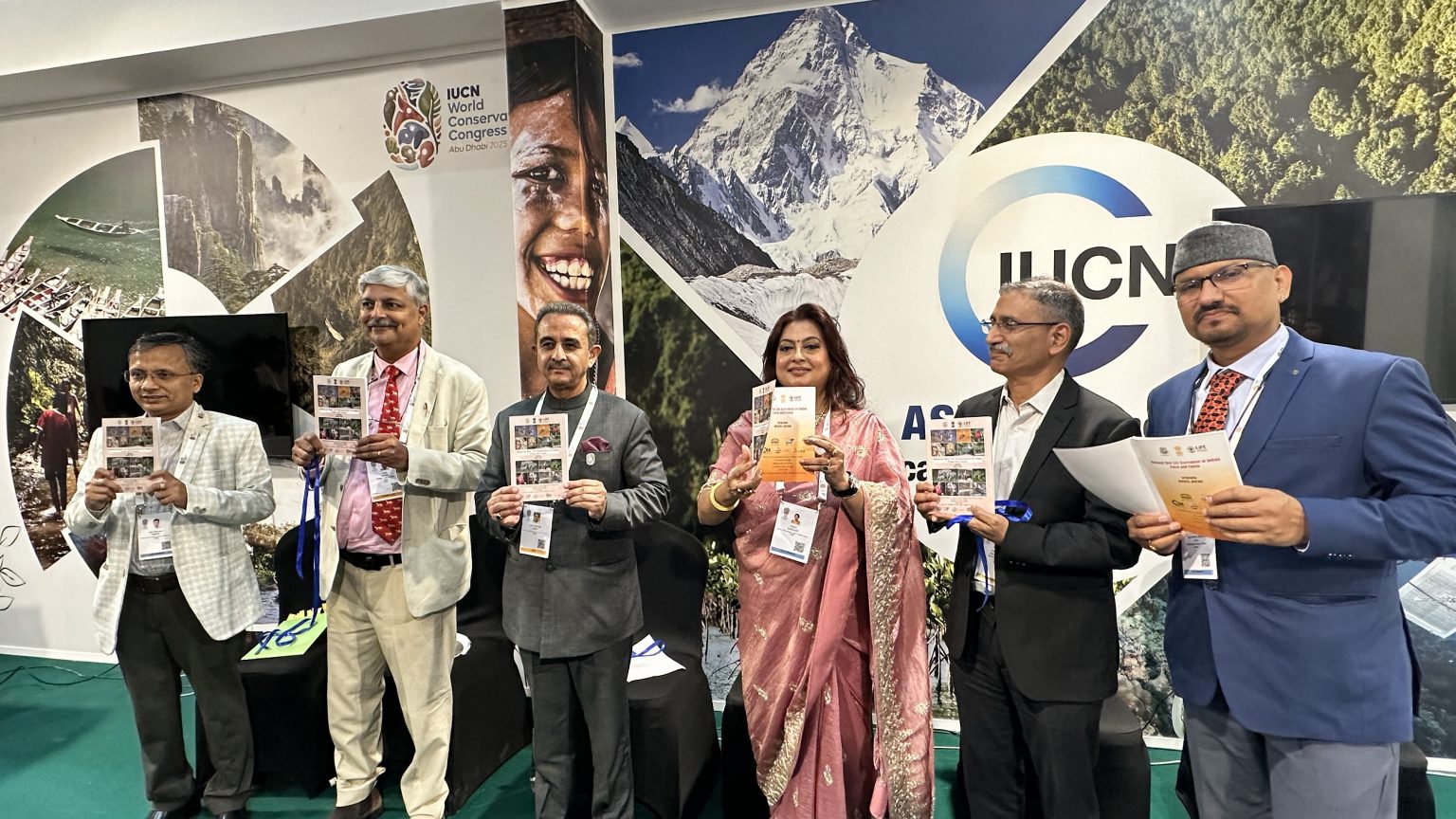
- 12 Oct 2025
In News:
At the IUCN World Conservation Congress 2025 in Abu Dhabi, India launched its National Red List Roadmap and Vision 2025–2030, marking a significant milestone in national biodiversity documentation and conservation policy. The initiativerepresents India’s commitment to establishing a comprehensive, science-based framework for assessing species and shaping long-term conservation priorities.
The National Red List Roadmap: Overview and Objectives
The National Red List Roadmap is India’s first integrated national initiative to identify, classify, and conserve threatened species across ecosystems — terrestrial, freshwater, and marine — in alignment with IUCN global standards.
It seeks to:
- Develop a nationally coordinated and inclusive red-listing system for flora and fauna.
- Generate baseline data and threat assessments to guide evidence-based policymaking.
- Strengthen India’s obligations under the Convention on Biological Diversity (CBD) and the Kunming–Montreal Global Biodiversity Framework (KMGBF).
- Foster collaboration among scientists, conservationists, and local communities to ensure equitable biodiversity protection.
The programme will culminate in the publication of India’s National Red Data Books for flora and fauna by 2030, creating an authoritative reference for conservation planning.
Institutional Collaboration
The roadmap is jointly prepared by:
- Zoological Survey of India (ZSI)
- Botanical Survey of India (BSI)
- IUCN-India, and
- Centre for Species Survival (CSS), India
This inter-agency collaboration ensures a unified system that combines scientific taxonomy, digital technology, and local knowledge systems to monitor and protect India’s biological diversity.
Vision 2025–2030: India’s Strategic Conservation Blueprint
The Vision 2025–2030 document provides a forward-looking framework to guide biodiversity governance over the next decade. It focuses on data-driven conservation, institutional synergy, and community participation, aligning with the UN Sustainable Development Goals (SDGs) and KMGBF targets.
Key Objectives:
- Establish a centralised biodiversity database for national-level coordination.
- Enhance species identification and taxonomy through expert collaboration.
- Integrate digital tools, GIS mapping, and field surveys for real-time species monitoring.
- Build a network connecting scientific institutions, local communities, and policymakers.
- Promote inclusive and equitable participation of indigenous and local communities in conservation processes.
By 2030, India aims to complete comprehensive species assessments, update threat categories, and integrate the results into national wildlife action plans and climate strategies.
India’s Biodiversity Profile
India is recognised as one of the 17 megadiverse countries in the world and hosts four of the 36 global biodiversity hotspots — the Himalayas, Western Ghats, Indo-Burma, and Sundaland.
Key Statistics:
- Covers 2.4% of global land area but supports nearly 8% of global flora and 7.5% of global fauna.
- Houses over 104,000 faunal species, 18,000 species of flowering plants, and around 20,000 marine species.
- Approximately 28% of plant species and 30% of animal species are endemic to India.
These figures underscore India’s ecological richness and the urgency for systematic monitoring and protection.
Legal and Policy Backing
- The initiative aligns with India’s robust legal framework for biodiversity conservation, anchored in the Wild Life (Protection) Act, 1972, which was amended in 2022 to extend protection to species listed under the CITES Appendices.
- The National Red List Roadmap will complement existing programmes like the National Biodiversity Mission, National Wildlife Action Plan, and Integrated Development of Wildlife Habitats, ensuring that conservation decisions are guided by scientific evidence and threat analysis.
Significance for Conservation Policy
- Evidence-Based Decision-Making: The roadmap institutionalises data-backed conservation planning.
- National Accountability: Regular species assessments will help monitor progress under national and global biodiversity targets.
- Scientific Collaboration: Encourages coordination among researchers, policymakers, and conservation agencies.
- Public Engagement: Integrates traditional ecological knowledge and community-driven documentation.
- Global Alignment: Reinforces India’s commitment to the Kunming–Montreal Global Biodiversity Framework and CBD Aichi Targets.
India–Afghanistan Relations Amid Taliban Diplomacy
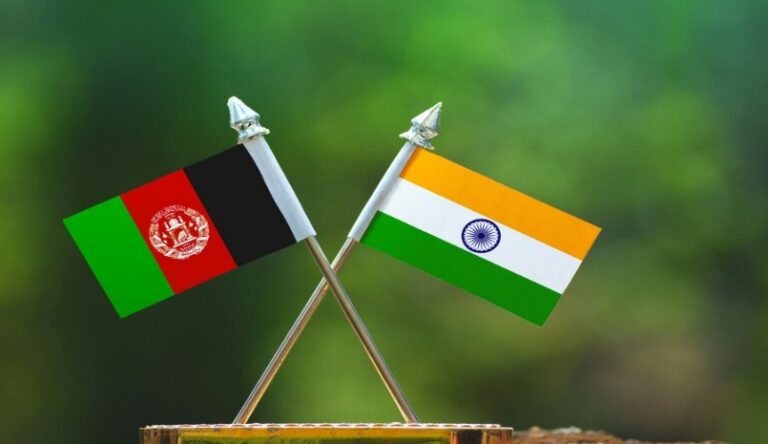
- 12 Oct 2025
In News:
Afghanistan’s Foreign Minister Amir Khan Muttaqi’s six-day visit to India marks the first high-level interaction between New Delhi and the Taliban government since 2021. The visit reflects India’s cautious yet pragmatic attempt to re-engage diplomatically with Kabul amid evolving regional dynamics.
Historical Foundations of India–Afghanistan Relations
The relationship between India and Afghanistan is rooted in civilisational, cultural, and strategic linkages that predate modern statehood.
- Civilisational Bonds: The ancient Kabul–Gandhara–Taxila corridor served as a conduit for trade and Buddhist exchanges, shaping a shared heritage.
- Political Affinity: After 1947, Afghanistan stood apart by opposing Pakistan’s admission to the UN, signalling early alignment with India.
- Developmental Partnership: Since 2001, India has invested over $3 billion in Afghanistan’s reconstruction, building major projects like the Salma Dam, Afghan Parliament, and the Zaranj–Delaram Highway, solidifying India’s goodwill.
- Humanitarian Outreach: Even after the Taliban takeover in 2021, India sustained “people-centric engagement” by supplying 50,000 tonnes of wheat, medicines, vaccines, and scholarships — reflecting its long-term commitment to the Afghan people.
India’s Strategic Calculus Behind Engagement
India’s current approach combines realism and restraint, shaped by five key strategic considerations:
a. Regional Stability and Connectivity
- Afghanistan remains crucial to India’s access to Central Asian energy markets.
- Projects like Chabahar Port and the International North–South Transport Corridor (INSTC) rely on Afghan stability for viability.
b. Countering Pakistan and China
- Taliban-led Afghanistan has seen strained ties with Pakistan while engaging with China’s BRI framework.
- India’s outreach seeks to dilute Pakistan’s strategic depth and limit China’s westward expansion through CPEC.
c. Counterterrorism and Security Cooperation
- Groups such as Lashkar-e-Taiba (LeT), Jaish-e-Mohammed (JeM), and Islamic State–Khorasan Province (ISKP) operate from Afghan soil.
- Diplomatic engagement allows for intelligence sharing, counterterror coordination, and crisis management.
d. Preventing Radicalisation Spillover
- Instability in Afghanistan could intensify cross-border militancy, narcotics trade, and extremist radicalisation, impacting India’s internal security.
e. Humanitarian and Soft-Power Diplomacy
- India’s assistance in education, health, and food security continues to build moral legitimacy and strengthen its image as a responsible regional power.
Policy Dilemmas and Diplomatic Constraints
Despite its engagement, India faces significant diplomatic challenges:
- Non-Recognition vs. Realpolitik: India has not formally recognised the Taliban regime but follows a de facto engagement policy to protect its strategic interests.
- Symbolic Diplomacy: Meetings in Dubai (2024) and New Delhi (2025) have carefully excluded Taliban flags and formal protocol to maintain a balance between engagement and legitimacy.
- Connectivity Challenges: The withdrawal of the Chabahar sanctions waiver constrains India’s access to Afghanistan and Central Asia.
- External Pressures: The US–Pakistan rapprochement, Russia–China engagement with Kabul, and Iran’s growing influence complicate India’s regional calculus.
- Human Rights Concerns: India must balance pragmatic engagement with its principled support for inclusive governance, women’s rights, and democratic values in Afghanistan.
Regional Implications of the Muttaqi Visit
|
Dimension |
Implications for India |
|
Strategic |
Strengthens dialogue on counterterrorism and connectivity; reduces Pakistan’s leverage. |
|
Economic |
Opens prospects for trade corridors via Chabahar and access to Afghanistan’s $1–3 trillion mineral reserves. |
|
Diplomatic |
Reinforces India’s position as a regional stabiliser engaging multiple stakeholders — Russia, Iran, and Central Asia. |
|
Security |
Enables real-time intelligence cooperation against extremist networks. |
|
Symbolic |
Projects India’s Strategic Autonomy Doctrine — engagement without endorsement. |
Way Forward
- Adopt a Dual-Track Policy: Continue humanitarian and developmental assistance while maintaining calibrated diplomatic engagement with the Taliban.
- Enhance Regional Coordination: Work through Moscow Format, SCO, and Heart of Asia platforms alongside Russia, Iran, and Central Asian partners.
- Revive Chabahar Connectivity: Explore limited sanctions relief through multilateral mechanisms to ensure sustained India–Afghanistan trade access.
- Institutionalise Counterterror Cooperation: Establish an India–Afghanistan Security Contact Group to share intelligence and monitor cross-border threats.
- Invest in Human Capital: Expand scholarships, online education, and women-focused programmes to strengthen long-term societal goodwill.
Conclusion
Amir Khan Muttaqi’s visit marks a diplomatic turning point — signalling India’s shift from cautious observation to strategic pragmatism in its Afghan policy. Balancing values with realism, New Delhi aims to secure its geopolitical and economic interests while upholding humanitarian principles.
India’s nuanced engagement — without formal recognition — positions it as a potential stabilising anchor in South–Central Asia, where constructive diplomacy rather than confrontation remains the key to regional peace and security.
Port of Pasni
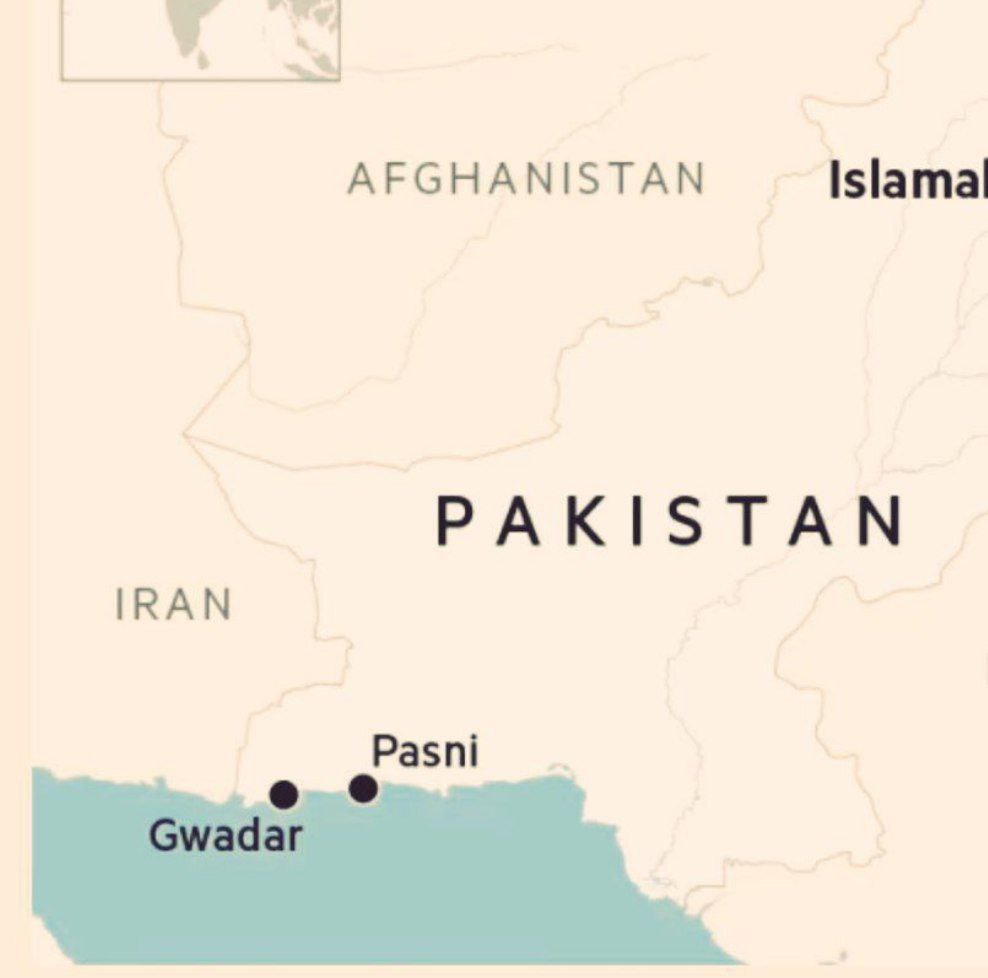
- 12 Oct 2025
In News:
Pakistan’s recent diplomatic engagements indicate a marked shift in its foreign policy priorities. The country, traditionally aligned with China under the China–Pakistan Economic Corridor (CPEC) framework, is now attempting to re-engage with the United States. Central to this emerging realignment is Islamabad’s reported proposal to allow the US to develop a new port at Pasni in Balochistan — a move that carries significant geopolitical and strategic ramifications.
The Pasni Port Proposal: Redefining Strategic Partnerships
Pakistan has reportedly offered the United States the opportunity to build and operate a port at Pasni, a deep-water harbour located on the Arabian Sea in Balochistan’s Gwadar district.
- The proposed port is around 70 miles east of China-operated Gwadar Port and approximately 100 miles from Iran’s border.
- The initiative aims to reduce Pakistan’s dependence on China’s Belt and Road Initiative (BRI), attract American investment, and open access to critical mineral exports from Balochistan.
- Plans for a railway linkage between Pasni and the hinterland have also been discussed to enhance trade connectivity.
If realised, this project would grant Washington a strategic maritime foothold in the region — an area of growing competition among global powers.
The Emerging Maritime Triangle: Pasni–Gwadar–Chabahar
Pasni’s location gives rise to a new maritime triangle involving:
- Gwadar Port – a China–Pakistan venture central to the CPEC framework;
- Chabahar Port – a joint India–Iran initiative providing access to Afghanistan and Central Asia; and
- Pasni Port – potentially linked to US–Pakistan cooperation.
This triad places China, the US, and India in close operational proximity, turning the northern Arabian Sea into a strategic hotspot where economic corridors overlap with geopolitical rivalries.
Economic Drivers: The Mineral Dimension
Balochistan is rich in rare earth elements and critical minerals, crucial for high-tech manufacturing and green technologies.
- During recent engagements in Washington, Pakistan’s leadership reportedly showcased samples of these minerals to US officials in an attempt to secure American investment.
- The proposal reflects a shift in Pakistan’s economic diplomacy — reoffering projects once promised to China now to the United States.
This “resource diplomacy” underlines Islamabad’s efforts to diversify partnerships amid economic distress and debt dependence on China.
Domestic Political Motivations
The overtures toward Washington also have domestic political undertones.
- The civil–military establishment, led by Prime Minister Shehbaz Sharif and Army Chief General Asim Munir, faces questions of legitimacy and stability at home.
- Closer ties with the US are seen as a way to gain international backing and financial relief.
- However, the leadership’s willingness to reconsider Pakistan’s stance on issues like recognition of Israel under the Abraham Accords has invited domestic criticism for allegedly compromising national principles and Palestinian solidarity without parliamentary approval.
Regional Reactions and Strategic Fallout
China’s Concerns
- Beijing views the Pasni initiative as undermining CPEC and encroaching upon its sphere of influence.
- A potential US presence near Gwadar and close to Xinjiang’s western frontier could be perceived as a strategic encirclement.
Iran’s Apprehensions
- Pasni’s proximity to the Iranian border raises concerns in Tehran, which already faces tensions with the US.
- The project could alter the regional balance and complicate Iran’s trade interests via Chabahar.
India’s Calculations
- India’s Chabahar Port project could lose strategic relevance if the Pasni initiative attracts significant US investment and attention.
- The US’s ambiguous stance on the Chabahar sanctions waiver further limits India’s operational space in the region.
Afghanistan’s Position
- The Taliban government may cautiously welcome US economic engagement but will resist any renewed American military presence, such as at Bagram Airbase.
Security Implications: Risk of Regional Instability
Balochistan already faces persistent challenges, including:
- Baloch insurgency,
- Militant violence in Khyber Pakhtunkhwa, and
- Ethnic and sectarian tensions.
Introducing American infrastructure and personnel into this volatile setting could exacerbate local grievances and trigger a new phase of proxy competition between the US and China.
Such dynamics risk turning Balochistan into a geostrategic flashpoint and further destabilising Pakistan’s internal security landscape
IAF to Receive First Tejas Mk1A Fighter Jet
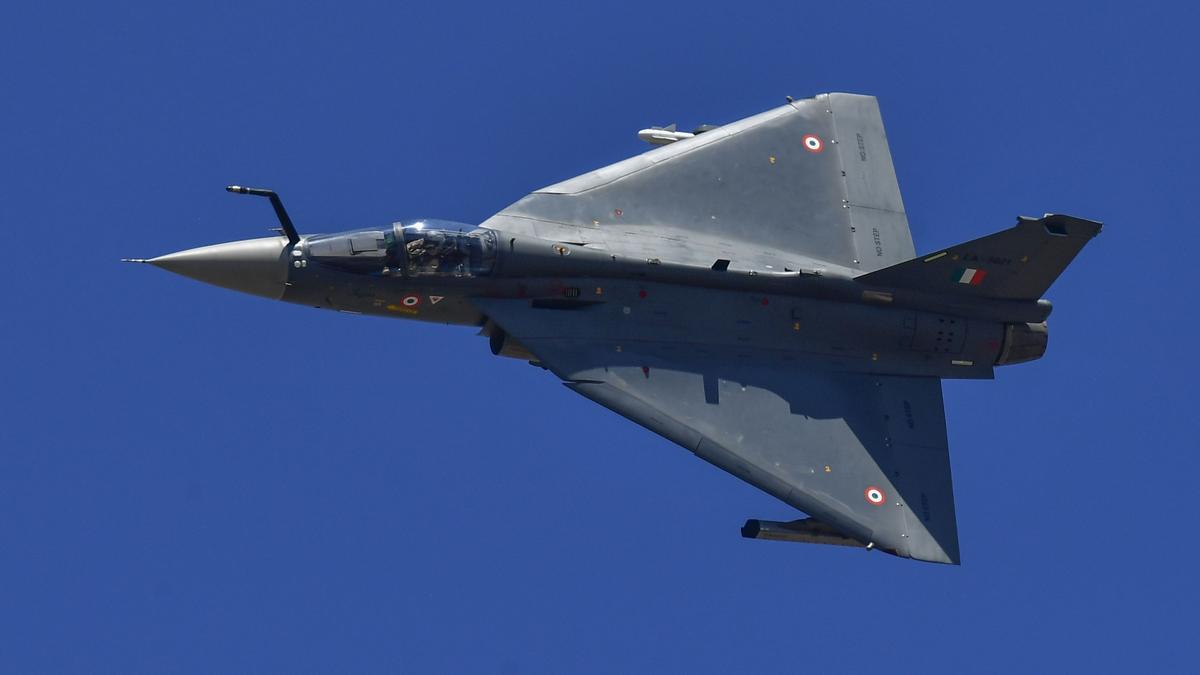
- 11 Oct 2025
In News:
The Indian Air Force (IAF) is set to receive its first Light Combat Aircraft (LCA) Tejas Mk1A by the end of October 2025, marking a major milestone in India’s indigenous defence manufacturing journey under the ‘Atmanirbhar Bharat’ initiative.
Background
- The Tejasprogramme, initiated in 1984 and managed by the Aeronautical Development Agency (ADA) under the Defence Research and Development Organisation (DRDO), was conceived to replace India’s ageing MiG-21 fighter fleet with an indigenously designed and developed multi-role combat aircraft.
- The delivery of the Tejas Mk1A comes under a ?48,000 crore contract signed in 2021 between the Indian Air Force and HAL for 83 aircraft (73 single-seaters and 10 twin-seaters). The production had been delayed primarily due to slow engine deliveries and global supply chain disruptions.
About Tejas Mk1A
The Tejas Mk1A is an upgraded and advanced variant of the baseline Tejas Mk1, designed to enhance combat capability, survivability, and operational maintainability.
Key Upgrades and Capabilities
- Active Electronically Scanned Array (AESA) Radar:Provides superior target detection, tracking, and engagement capability, improving situational awareness and strike precision.
- Electronic Warfare Suite (EWS):Equipped with radar-warning receivers and self-protection jammers, enhancing survivability against enemy radar and missile threats.
- Digital Flight Control Computer (DFCC Mk1A):Improves flight stability, agility, and maneuverability during high-G operations.
- Weapon Compatibility:Supports a wide range of weapons including:
- Beyond Visual Range (BVR) missiles,
- Air-to-Air and Air-to-Ground missiles, and
- Advanced Short-Range Air-to-Air Missiles (ASRAAM).
- Enhanced Avionics and Network Systems:Planned integration of Combined Interrogator and Transponder (CIT), Software Defined Radio (SDR), and Operational Data Link (ODL) for real-time communication and network-centric warfare.
LCA Tejas: Core Features
- Design: Lightest, smallest, and tailless multi-role supersonic fighter in its class.
- Speed: Capable of reaching Mach 1.8.
- Range: Up to 3,000 km.
- Payload Capacity:4,000 kg, supporting precision-guided and conventional munitions.
- Roles: Capable of air superiority, ground attack, and reconnaissance missions.
Variants of the Tejas Family
- Tejas Mk1: Baseline version currently operational with the IAF.
- Tejas Trainer: Twin-seat variant for advanced pilot training and operational conversion.
- LCA Navy: Carrier-capable single- and twin-seat variants for deck operations.
- Tejas Navy Mk2: Phase-II version with enhanced endurance and payload for naval missions.
- Tejas Mk1A: Improved variant with advanced avionics, weapon systems, and network capabilities.
India–Qatar Relations
- 11 Oct 2025
In News:
- The Union Minister of Commerce and Industry, Piyush Goyal, recently visited Doha, Qatar, to co-chair the India–Qatar Joint Commission on Economic and Commercial Cooperation with H.E. Sheikh Faisal bin Thani bin Faisal Al Thani, Qatar’s Minister of Commerce and Industry.
- The visit marked a significant step toward strengthening bilateral economic engagement, deepening energy cooperation, and advancing a future-ready partnership between the two nations.
India–Qatar Joint Commission Meeting: Key Outcomes
- Ambitious Trade Target:Both sides recognised the untapped potential in their economic relationship and set an ambitious goal to double bilateral trade by 2030. Currently, trade between the two nations stands at around USD 14 billion.
- India–Qatar Comprehensive Economic Partnership Agreement (CEPA):The countries reaffirmed their commitment to pursue an ambitious CEPA, a free-trade pact aimed at deepening market access, investment flows, and trade facilitation.
- Digital Integration:A major milestone was the launch of India’s Unified Payments Interface (UPI) in Qatar, enabling seamless digital payments for both the Indian diaspora and Qatari consumers—symbolising the growing digital and fintech cooperation between the two nations.
- Sectoral Cooperation:
The ministers identified multiple sectors for expansion of trade and investment:- Traditional sectors: Pharmaceuticals, textiles, gems &jewellery.
- Manufacturing & technology: Electronics, automobiles, processed foods.
- Future-focused areas: IT, high-tech industries, and renewable energy (especially solar).
- Energy Partnership:India appreciated Qatar’s long-term LNG supply agreement of 7.5 million tonnes per year from 2028, underscoring the centrality of energy security in the bilateral relationship.
Bilateral Trade and Economic Ties
- Trade Profile (FY 2024–25):Bilateral trade stood at USD 14.15 billion, with India facing a trade deficit of about USD 10.78 billion, primarily due to hydrocarbon imports.
- Qatar’s exports to India comprise petroleum and LNG (89% of total trade), while India exports food products, textiles, machinery, and chemicals.
- Investment Linkages:Over 20,000 Indian companies (wholly owned and joint ventures) operate in Qatar, while Qatar’s FDI in India is valued at around USD 1.5 billion, spread across sectors like energy, infrastructure, and technology.
- The Qatar Investment Authority (QIA) has also invested heavily in India’s National Infrastructure Pipeline (NIP), technology start-ups, and real estate.
- Digital and Fintech Cooperation:The introduction of UPI in Qatar represents India’s expanding digital public infrastructure diplomacy, strengthening financial inclusion for over 800,000 Indian residents in Qatar.
Strategic Cooperation Beyond Trade
Energy Security
- Qatar as a Key Supplier:Qatar is India’s largest LNG and LPG supplier, accounting for 26% of India’s LPG imports and over three-fourths of total bilateral trade through hydrocarbons.
- Stability and Clean Transition:Long-term LNG contracts ensure price stability and support India’s clean energy transition under its net-zero goals.
Defence and Security
- The India–Qatar Defence Cooperation Agreement (2008, renewed in 2018) provides a framework for training, naval visits, and joint maritime exercises such as Za’ir-Al-Bahr (Roar of the Sea).
- Regular participation in events like DIMDEX (Doha International Maritime Defence Exhibition) reflects deepening maritime security ties in the Indian Ocean Region.
Cultural and People-to-People Ties
- The 2012 Cultural Cooperation Agreement and the 2019 India–Qatar Year of Culture have promoted cultural exchange through festivals like ‘Passage to India’ (2024).
- The Indian diaspora in Qatar, numbering over 830,000, forms a vital bridge between the two nations, contributing to Qatar’s development and remitting billions annually to India.
Mutual Significance
For India
- Energy Security: Ensures steady LNG supplies and shields India from global price volatility.
- Strategic Investments: QIA’s long-term investments aid infrastructure and industrial growth.
- Diaspora Strength: Provides remittances and strengthens cultural linkages.
- Strategic Depth in West Asia: Qatar’s regional diplomacy and ties with global powers enhance India’s strategic outreach in the Gulf.
For Qatar
- Stable Energy Market: India provides a reliable and growing market for LNG exports, critical for Qatar’s fiscal stability.
- Economic Diversification: India offers investment opportunities beyond hydrocarbons, particularly in fintech, renewables, healthcare, and education.
- Food and Supply Chain Security: India’s exports ensure Qatar’s access to essential commodities and pharmaceuticals.
- Knowledge Partnership: India’s IT, education, and skill development sectors support Qatar’s shift toward a knowledge-based economy under Qatar National Vision 2030.
Broader Vision: Strategic Partnership and Future Outlook
- The visit underscored the elevation of India–Qatar ties to a Strategic Partnership, aligning with India’s vision of becoming a Viksit Bharat by 2047.
Minister Goyal emphasised India’s macroeconomic resilience, robust startup ecosystem, and inclusive growth model, encouraging greater Qatari investments and joint ventures in India’s high-growth sectors. - Both nations agreed to strengthen institutional dialogues, deepen cooperative federalism, and promote business-to-business engagements through platforms such as the India–Qatar Joint Business Council (JBC).
Shram Shakti Niti 2025
- 11 Oct 2025
In News:
The Ministry of Labour and Employment has released the Draft National Labour& Employment Policy – Shram Shakti Niti 2025 for public consultation. This marks India’s first integrated national labour and employment policy, aiming to build a fair, inclusive, and future-ready workforce aligned with the vision of Viksit Bharat @2047.
Objective
- Shram Shakti Niti 2025 seeks to modernise India’s labour ecosystem by ensuring dignity, protection, and opportunity for every worker while responding to emerging challenges such as digital transformation, climate change, and global value chain integration.
- It signals a shift from regulation to facilitation, positioning the Ministry as a proactive employment enabler rather than merely a regulatory authority.
Core Vision and Pillars
The policy is guided by four overarching pillars:
- Dignity of Labour – Ensuring fairness, safety, and equal opportunity.
- Universal Inclusion – Extending benefits to all categories of workers, including informal and gig sectors.
- Cooperative Federalism – Promoting Centre–State coordination and tripartite dialogue among government, employers, and workers.
- Data-Driven Governance – Leveraging digital tools for evidence-based policymaking and transparency.
Seven Strategic Priorities
Shram Shakti Niti 2025 defines seven key focus areas that together shape India’s future of work:
- Universal and Portable Social Security:
- Introduction of a Universal Social Security Account integrating EPFO, ESIC, e-Shram, and PM-JAY, ensuring lifelong and portable coverage.
- Aims to enhance income security and protection for both formal and informal sector workers.
- Occupational Safety and Health:
- Promotes AI-enabled workplace safety systems and health monitoring frameworks.
- Strengthens compliance through digital inspections and risk-based certifications.
- Employment and Future Readiness:
- Builds a resilient, skilled workforce ready for automation, AI, and green transitions.
- Expands digital and vocational skill training to meet the demands of Industry 4.0.
- Women and Youth Empowerment:
- Targets 35% female labour force participation by 2030.
- Encourages flexible work models, childcare support, entrepreneurship, and skill pathways for youth.
- Ease of Compliance and Formalisation:
- Launch of a single-window digital compliance portal with risk-based self-certification to simplify regulations and enhance trust-based governance.
- Technology and Green Transitions:
- Promotes green jobs, sustainable enterprises, and AI-driven workforce management.
- Aligns labour policy with India’s climate and sustainability goals.
- Convergence and Good Governance:
- Establishes a three-tier institutional structure — National, State, and District Labour Missions.
- Introduces a Labour& Employment Policy Evaluation Index (LEPEI) for performance tracking.
- Integrates worker identities, enterprise data, and social security benefits into a unified Labour& Employment Stack.
Digital Public Infrastructure for Employment
A key innovation under Shram Shakti Niti 2025 is the transformation of the National Career Service (NCS) into India’s Employment Digital Public Infrastructure (DPI).
This platform will provide:
- AI-based job matching and credential verification,
- Skill alignment and career guidance, and
- Inclusive access to opportunities across Tier-II and Tier-III cities.
This approach aims to bridge the gap between job seekers, employers, and training institutions through trusted, interoperable digital systems.
Alignment with Labour Reforms
The draft policy complements the consolidation of 29 central labour laws into four Labour Codes:
- Code on Wages, 2019
- Industrial Relations Code, 2020
- Occupational Safety, Health and Working Conditions Code, 2020
- Social Security Code, 2020
Together, these aim to enhance ease of doing business while safeguarding workers’ rights.
Implementation Framework
The policy outlines a phased roadmap (2025–2047):
- Phase I (2025–27): Institutional setup, pilot projects, and digital integration of social security systems.
- Phase II (2027–30): Nationwide rollout of Universal Social Security and AI-driven employment services.
- Phase III (Beyond 2030): Full digital convergence and predictive, data-based labour governance.
Significance
- First comprehensive national labour policy integrating employment, social protection, and technology.
- Enhances labour market efficiency and reduces regulatory fragmentation.
- Ensures inclusive growth by bridging formal–informal divides and empowering women and youth.
- Strengthens cooperative federalism and participatory governance in the world of work.
Nobel Prize in Chemistry 2025

- 11 Oct 2025
In News:
The 2025 Nobel Prize in Chemistry has been awarded to Susumu Kitagawa (Japan), Richard Robson (Australia), and Omar Yaghi (Jordan–USA) for their pioneering work in developing Metal–Organic Frameworks (MOFs) — a novel class of crystalline materials with exceptional porosity and tunable chemical properties. Their innovation has transformed the field of materials chemistry, enabling new solutions for energy, environment, and sustainability.
About the Nobel Prize in Chemistry
Instituted under the 1895 will of Alfred Nobel, the Nobel Prize in Chemistry honours individuals whose discoveries have profoundly advanced the chemical sciences and benefitted humanity. The 2025 award acknowledges a transformative leap in reticular chemistry — the design and synthesis of porous networks using metal ions and organic linkers.
Genesis of Metal–Organic Frameworks (MOFs)
In most materials, atoms are tightly packed, leaving little internal space. The Nobel laureates devised a way to link metal atoms with organic molecules in an open, lattice-like structure that leaves large, orderly cavities — creating materials capable of trapping, storing, or releasing other molecules with precision.
- Richard Robson, in the 1970s at the University of Melbourne, first envisioned connecting atoms through molecular linkers to create spacious molecular architectures.
- Susumu Kitagawa in the 1990s demonstrated that such frameworks could be flexible, “breathing” materials capable of absorbing and releasing gases.
- Omar Yaghi, from the 2000s onwards, stabilised these frameworks and founded reticular chemistry, systematically designing MOFs for targeted purposes such as carbon capture, water harvesting, and gas storage.
What are MOFs?
Metal–Organic Frameworks (MOFs) are hybrid crystalline materials formed by coordinating metal ions or clusters (e.g., copper, zinc, aluminium) with organic ligands to produce rigid, porous 3D networks.
These frameworks function like atomic sponges, capable of holding, filtering, or releasing molecules with high selectivity. Each gram of a MOF can offer a surface area equivalent to several football fields, allowing immense storage capacity.
Key Properties of MOFs
- Super Porosity:Exceptionally high internal surface area, enabling efficient molecular capture and storage.
- Customisability:The pore size, shape, and chemical affinity can be precisely engineered to trap specific molecules — for example, CO? or methane.
- Breathing Flexibility:Some MOFs expand or contract in response to absorbed gases, similar to a lung inhaling and exhaling.
- Chemical Stability:MOFs are robust, reusable, and resistant to heat and chemical degradation.
- Eco-Friendly Synthesis:They can be produced via low-cost, green methods, enhancing scalability and industrial applicability.
Applications and Global Relevance
- Climate Action – Carbon Capture:MOFs can selectively absorb carbon dioxide (CO?) from industrial emissions or the atmosphere, aiding climate mitigation strategies.
- Water Harvesting:Certain MOFs extract water vapour from arid air — a potential lifeline for water-scarce regions.
- Clean Energy Transition:Their ability to store hydrogen or methane makes MOFs promising materials for next-generation, lightweight, and safe fuel systems.
- Environmental Remediation:MOFs can trap and remove pollutants such as PFAS, heavy metals, and toxic gases, supporting cleaner air and water.
- Biomedical and Catalytic Uses:In pharmaceuticals and industrial chemistry, MOFs act as catalysts or as carriers for targeted drug delivery.
NITI Aayog report “Roadmap on AI for Inclusive Societal Development”
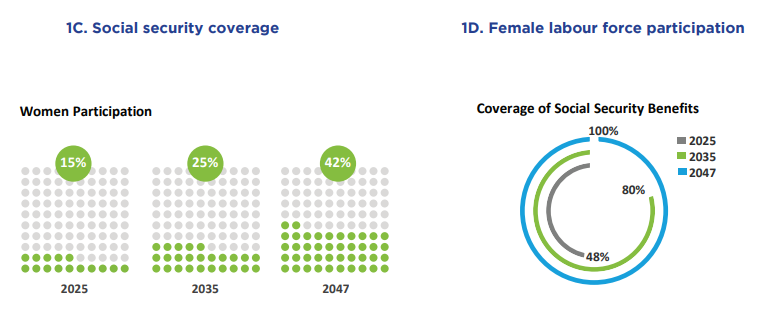
- 11 Oct 2025
In News:
NITI Aayog has unveiled its strategic report “Roadmap on AI for Inclusive Societal Development”, which presents a comprehensive vision for leveraging Artificial Intelligence (AI) to strengthen India’s vast informal economy through enhanced digital inclusion, skilling, and social protection systems.
Status of India’s Informal Workforce
- Scale and Economic Role: Approximately 490 million Indians—about 90% of the national workforce—are engaged in informal employment spanning agriculture, construction, and services, together contributing nearly half of India’s GDP (MoLE, 2024).
- Rural Dominance: Over 80% of rural labourers operate without written contracts or social security coverage, especially in construction, handicrafts, and retail sectors.
- Gendered Vulnerability: Women constitute around 55% of the informal workforce, with significant representation in home-based and agricultural activities (ILO, 2023).
- Low Productivity and Earnings: Informal sector productivity remains roughly one-fourth that of the formal economy, perpetuating low wages and economic insecurity.
- Emergence of Urban Informality: The gig and platform economy has created a new informal class, with nearly 7.5 million platform workers (NITI Aayog, 2022) still outside formal labour protections.
Core Challenges
- Financial Instability: Over three-fourths of informal workers earn below ?10,000 per month and face limited access to affordable credit or insurance (PLFS, 2024).
- Market Inefficiencies: Only about 12% of small producers or artisans access digital or organized markets directly, remaining dependent on intermediaries.
- Digital and Skill Divide: Around 70% of informal workers lack basic digital literacy, impeding their participation in AI-integrated economies.
- Weak Social Protection: Just one-third of eligible informal workers are registered under welfare schemes such as e-Shram or PM-SYM.
- Policy Fragmentation: Overlapping databases and weak institutional coordination hinder effective benefit delivery and erode worker trust.
Transformative Potential of AI
- Financial Empowerment: AI-based credit assessment tools (e.g., SBI YONO, Setu.ai) can facilitate microloans for workers lacking traditional financial records.
- Digital Public Infrastructure (DPI): Platforms such as Aadhaar, UPI, and e-Shram can establish verifiable worker identities, improving transparency in wage payments and welfare targeting.
- Smart Contracts and Blockchain: Use of blockchain for wage traceability and supply chain verification (e.g., Tata Steel Foundation’s pilot in Jharkhand) can curb exploitation.
- AI-driven Skilling: Adaptive learning ecosystems like Skill India Digital can deliver personalized, voice-enabled vernacular micro-courses for re-skilling informal workers.
- Predictive Governance: AI-based data analytics can enhance targeting and timeliness of welfare delivery (e.g., integration with PM-Kisan data systems).
Major Recommendations
- Launch of ‘Digital ShramSetu Mission’: Create an AI-enabled national platform integrating social security, skilling, and livelihood databases for informal workers.
- Sector-specific AI Models: Focus on high-impact areas—agriculture, construction, logistics, and retail—for productivity enhancement.
- Inclusive Design: Develop voice-first, multilingual AI interfaces to ensure accessibility for low-literacy populations.
- Public–Private Collaboration: Promote partnerships among government agencies, startups, and tech firms for scalable innovation in informal ecosystems.
- Responsible AI Charter: Establish a framework ensuring transparency, privacy, and inclusivity in AI deployment for social sectors.
- AI-based Skilling Framework: Institutionalize micro-credential courses and continuous re-skilling under Skill India 2.0.
- Impact Evaluation Mechanism: Implement real-time data-driven monitoring to assess inclusion, income enhancement, and service delivery outcomes.
UNESCO’s New Director-General

- 10 Oct 2025
In News:
The Executive Board of UNESCO (United Nations Educational, Scientific and Cultural Organization) has elected Egypt’s Khaled El-Enany as its new Director-General for a four-year term (2025–2029), succeeding Audrey Azoulay of France. His election marks a significant moment for African and Arab representation within the United Nations system.
About the Election Process
- Nomination: Candidates are nominated by member states and evaluated by UNESCO’s 58-member Executive Board.
- Voting: The Board conducts a secret ballot, requiring an absolute majority to select a nominee.
- Approval: The selected candidate’s name is then forwarded to the General Conference—comprising 194 member states—for formal confirmation.
About the Director-General’s Role
The Director-General serves as the chief executive officer and spokesperson of UNESCO, responsible for implementing the policies and decisions of the General Conference and Executive Board.
Key Functions
- Leadership & Administration:
- Oversees UNESCO’s global programmes across education, culture, science, and communication.
- Manages the World Heritage Sites framework and educational cooperation initiatives.
- Policy Implementation:Translates strategic resolutions of the General Conference into operational programmes.
- Global Representation:Acts as the face of UNESCO in international diplomacy, fostering partnerships for cultural and educational cooperation.
- Financial Stewardship:Mobilizes funding, particularly important after the U.S. withdrawal, which caused an 8% cut in UNESCO’s annual budget.
About UNESCO
- Founded: 1945
- Headquarters: Paris, France
- Membership: 194 member states
- Mandate: To promote peace, education, science, and cultural understanding through international collaboration.
UNESCO’s global initiatives include:
- The World Heritage Convention (1972)
- The Education for Sustainable Development (ESD) framework
- The Man and the Biosphere (MAB)Programme
- Promotion of freedom of expression and media pluralism
Tigers Outside Tiger Reserves (TOTR) Project
- 10 Oct 2025
In News:
During Wildlife Week 2025 (October 2–8), the Union Minister for Environment, Forest and Climate Change, Bhupender Yadav, launched five major species conservation and conflict management initiatives at the Forest Research Institute (FRI), Dehradun. The initiatives aim to reinforce India’s commitment to biodiversity conservation while addressing the growing challenge of human–wildlife conflict amid rapid development.
The Five Initiatives
- Project Dolphin (Phase II)
- Project Sloth Bear
- Project Gharial
- Centre of Excellence for Human–Wildlife Conflict Management (CoE–HWC)
- Tigers Outside Tiger Reserves (TOTR)
In addition, four national-level action plans and field guides were unveiled to support species monitoring and population assessment of river dolphins, tigers, snow leopards, Great Indian Bustard, and Lesser Florican.
1. Tigers Outside Tiger Reserves (TOTR) Project
Overview
- A new national-level initiative by the MoEFCC and National Tiger Conservation Authority (NTCA).
- Implementation period: 2025–2028
- Budget: ?88.7 crore
- Coordination: Centrally by NTCA; executed by State Forest Departments.
Objectives
- Reduce human–tiger conflict in non-reserve areas.
- Ensure safe coexistence between communities and tigers dispersing beyond reserves due to population recovery and habitat fragmentation.
- Promote a landscape-level conservation approach integrating ecological, social, and livelihood priorities.
Geographical Coverage
- Encompasses 80 forest divisions across 17 tiger-range states, including Madhya Pradesh, Maharashtra, Karnataka, Uttarakhand, Assam, Kerala, Tamil Nadu, West Bengal, andArunachal Pradesh.
- Focuses on corridors and buffer areas adjoining major tiger reserves.
Key Features
- Technology & Monitoring:Use of AI-based early warning systems, drones, camera traps, GPS-enabled patrolling, andMSTrIPES app for real-time tracking.
- Community Participation:
- Establishment of Rapid Response Teams (RRTs) equipped with tranquilization gear, rescue tools, and vehicles.
- Launch of “Bagh Mitra” (Tiger Friends)programmes and student jungle camps to foster coexistence.
- Institutional Framework:
- NTCA to oversee implementation; Chief Wildlife Wardens and State CAMPA authorities to manage funds and on-ground execution.
Significance
- India hosts 70% of the global tiger population — 3,682 as of 2022.
- Around 35–40% (1,325 tigers) now live outside protected areas, increasing the frequency of human–tiger encounters.
- The TOTR project seeks to balance conservation with human safety through modern technology, community outreach, and continuous monitoring.
Project Dolphin (Phase II)
- Focuses on conserving river and marine cetaceans, including the endangered Ganga River Dolphin and Indus Dolphin.
- Aims to enhance habitat protection, improve water quality in river ecosystems, and strengthen anti-poaching measures.
- Encourages local community participation and awareness through riverine eco-tourism and citizen science initiatives.
Project Sloth Bear
- India’s first national framework for the conservation of sloth bears, a species threatened by habitat loss, poaching, and human conflict.
- Focus areas include:
- Habitat restoration and connectivity,
- Mitigation of bear–human conflict,
- Establishment of rescue and rehabilitation centres, and
- Awareness campaigns for community coexistence.
Project Gharial
- Aims to revive populations of the critically endangered gharial in Indian rivers like the Chambal and Gandak.
- Measures include nest protection, captive breeding, river habitat restoration, and monitoring through telemetry.
- Seeks to strengthen coordination among state wildlife departments, river authorities, andlocal communities.
Centre of Excellence for Human–Wildlife Conflict Management (CoE–HWC)
- Location:Sálim Ali Centre for Ornithology and Natural History (SACON), Coimbatore.
- Purpose:
- To serve as a national research and policy hub for addressing human–wildlife conflicts.
- Develop AI-based conflict prediction models, design field-level mitigation tools, and train forest officials and local communities.
Trade Watch Quarterly Report
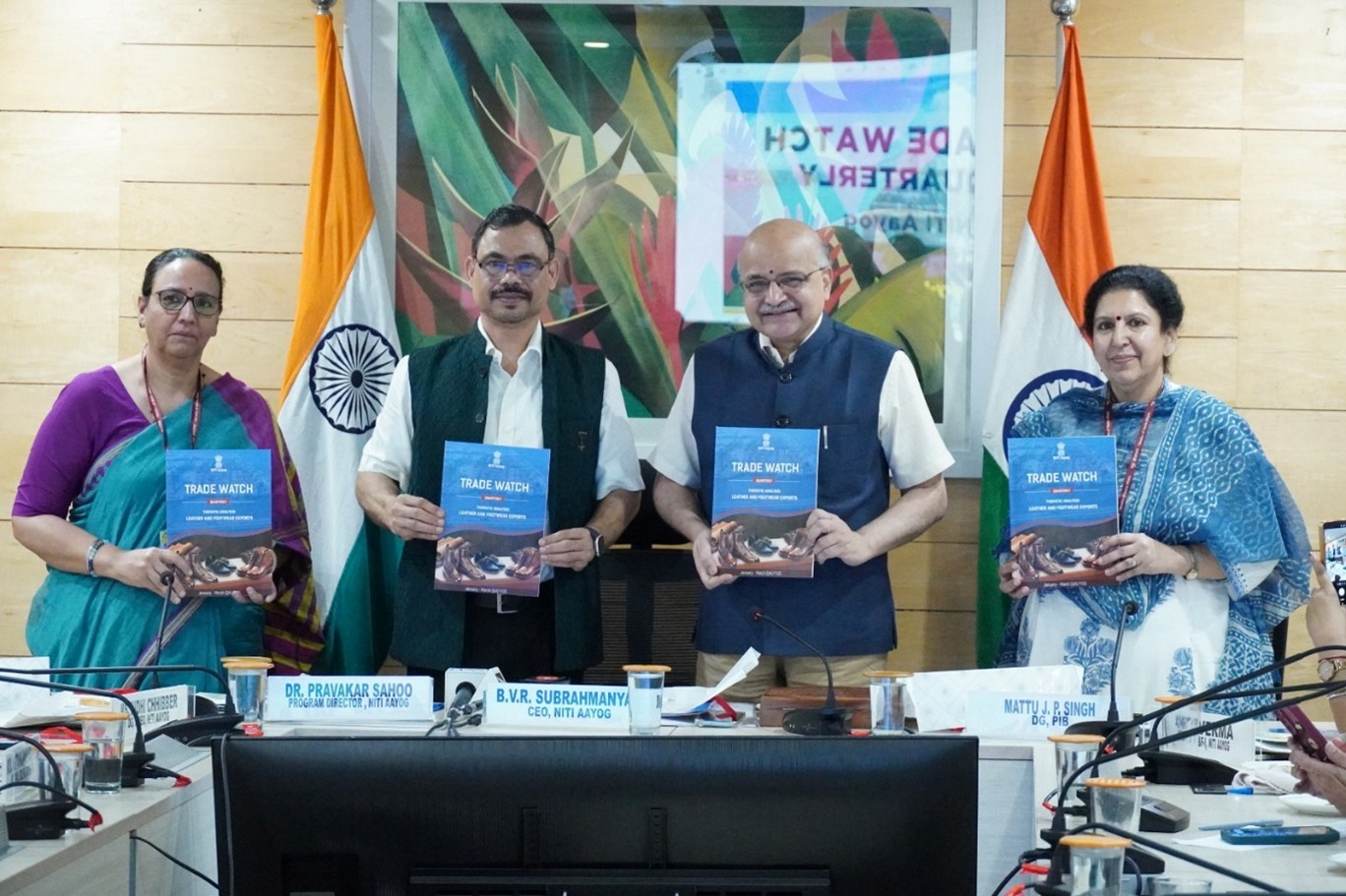
- 10 Oct 2025
In News:
NITI Aayog released the fourth edition of the “Trade Watch Quarterly” report for Q4 of FY 2024–25 (January–March 2025) in New Delhi. The report, unveiled by B.V.R. Subrahmanyam, CEO of NITI Aayog, provides a detailed evaluation of India’s trade performance, identifies emerging opportunities, and suggests policy directions for enhancing export competitiveness.
About the “Trade Watch Quarterly”
- Publisher: NITI Aayog
- Nature: Flagship analytical publication assessing India’s quarterly trade trends across merchandise and services.
- Objectives:
- To offer evidence-based insights into trade patterns, export competitiveness, and sectoral challenges.
- To guide policy interventions for strengthening India’s manufacturing ecosystem and expanding participation in global value chains (GVCs).
Key Highlights of Q4 FY 2024–25
- Total Trade: USD $441 billion, registering a 2.2% year-on-year increase.
- Annual Trade (FY25):
- Total: USD $1.73 trillion (+6% YoY)
- Exports: USD $823 billion
- Imports: USD $908 billion
Merchandise and Services Trends
- Merchandise Exports: Witnessed a modest contraction, primarily due to lower shipments of mineral fuels and organic chemicals.
- Growth Sectors: Electrical machinery, pharmaceuticals, and cereals.
- Services Exports: Reached an all-time high of $387.5 billion, led by IT, aviation, and financial services, reflecting India’s growing strength in high-value services.
Regional Trade Patterns
- Top Export Market:North America, accounting for 25% of India’s exports and growing 25% YoY.
- Moderate Growth Regions:EU, GCC, and ASEAN, showing a slowdown in demand.
- Import Trends:
- UAE became India’s second-largest supplier, driven by gold inflows under the CEPA agreement.
- China’s imports surged due to strong demand for electronics and machinery.
Sectoral Focus: Leather and Footwear Industry
- Employs 4.4 million people, contributing significantly to export earnings.
- India’s share in the $296 billion global market remains modest at 1.8%.
- Strengths: Competitive in processed leathers and niche apparel.
- Challenges & Opportunities:
- Global demand shifting towards non-leather and sustainable products.
- India must invest in R&D, MSME strengthening, green manufacturing, anddesign-led innovation to boost competitiveness and diversify exports.
Policy Insights and Way Forward
- India must:
- Diversify its export basket to align with evolving global demand patterns.
- Leverage trade agreements (like CEPA with UAE) to expand market access.
- Enhance manufacturing competitiveness through innovation and integration withGVCs.
- Strengthen non-leather footwear and sustainable sectors to tap into emerging global trends.
International Stabilization Force for Gaza (ISF)

- 10 Oct 2025
In News:
In September 2025, U.S. President Donald Trump unveiled a 20-point “Comprehensive Plan to End the Gaza Conflict”, proposing an International Stabilization Force (ISF) to manage post-war Gaza. While both Israel and Hamas accepted the ceasefire and hostage-release obligations, deep divergences persist over Gaza’s future governance, Hamas’s fate, and the legitimacy of the ISF.
What Is the ISF?
The International Stabilization Force for Gaza is a proposed multinational security mission aimed at maintaining internal stability, enabling phased Israeli withdrawal, and overseeing Gaza’s demilitarization.
- Nature: A temporary but long-term security component of a technocratic, apolitical Palestinian Transitional Committee, which will govern Gaza during the interim period.
- Oversight: The ISF will operate under a “Board of Peace” chaired by the U.S. President, rather than the United Nations (UN).
- Composition: To be formed with “Arab and international partners,” but without a UN Security Council (UNSC) mandate—limiting its neutrality and legal legitimacy.
Objectives and Core Functions
- Demilitarization of Gaza:
- Confiscate and destroy Hamas weaponry.
- Prevent smuggling and block the inflow of arms.
- Security and Law Enforcement:
- Maintain order in “terror-free zones” vacated by the Israeli Defense Forces (IDF).
- Set milestones and timelines linked to Israel’s phased withdrawal.
- Capacity Building:Train and professionalize Palestinian law enforcement under international supervision.
- Governance Transition:Facilitate the formation of a reformed Palestinian security apparatus aligned with the transitional governance framework.
- Monitoring and Compliance:Track progress on demilitarization and withdrawal to prevent relapse into conflict.
Absence of a UN Mandate and Legitimacy Concerns
Unlike traditional UN peacekeeping or stabilization missions, which derive legitimacy from UNSC authorization under Chapter VII of the UN Charter, the ISF is designed to operate outside the UN framework.
- The UN’s role in Trump’s plan is restricted to aid distribution, not peacekeeping.
- Arab states have historically resisted deploying troops in Palestine under non-UN command, citing concerns about political bias and lack of legal accountability.
- Consequently, the ISF’s perceived alignment with American and Israeli objectives could undermine its credibility among Palestinians and regional actors.
Precedents and Lessons from Past Stabilization Missions
Previous stabilization forces outside or alongside the UN framework reveal the complexity and risks of such interventions:
- Afghanistan (ISAF, 2001–2021): Initially authorized by the UN and later led by NATO, the mission expanded into combat operations against the Taliban but failed to establish durable peace.
- Lebanon (MNF, 1982–1983): A U.S.-led multinational force, created outside the UN, withdrew after facing intense violence from militias, highlighting the dangers of intervention without broad legitimacy or consent.
These experiences underscore that stabilization without political resolution often leads to mission failure and regional backlash.
Challenges in the Palestinian Context
- Lack of Political Resolution:
- The two-state solution remains unrealized; Israeli occupation continues in parts of Gaza and the West Bank.
- Without a clear political settlement, any international force risks being drawn into hostilities.
- Israeli and Hamas Positions:
- Israel has refused a full withdrawal from Gaza, citing security concerns.
- Hamas has not agreed to complete disarmament or exclusion from the Palestinian political framework.
- These contradictory stances create operational uncertainty for the ISF.
- Arab States’ Reservations:
- Arab governments have called for aUN-mandated protection force, not a U.S.-led stabilization mission.
- An eight-nation Arab-Islamic statement (Sept 30, 2025) demanded Israel’s complete withdrawal, diverging sharply from Washington’s version of the plan.
- Risk of Renewed Armed Resistance:Partial Israeli withdrawal and continued occupation zones could fuel militant activity, increasing the risk of direct confrontation with the ISF.
- Limited Accountability:Absence of UN oversight and clear reporting mechanisms raises concerns over the ISF’s command structure, rules of engagement, and human rights compliance.
Geopolitical and Strategic Implications
- For the U.S.: The ISF signifies Washington’s intent to maintain strategic control over Gaza’s post-conflict order, reducing UN influence.
- For Israel: The arrangement allows for partial demilitarization without ceding full security control—aligning with its domestic political compulsions.
- For Arab States: It poses a dilemma between supporting stability and avoiding association with a potentially occupation-legitimizing force.
- For Palestine: The lack of a fully sovereign and representative governance framework risks perpetuating disenfranchisement and renewed cycles of violence.
State of Social Justice 2025
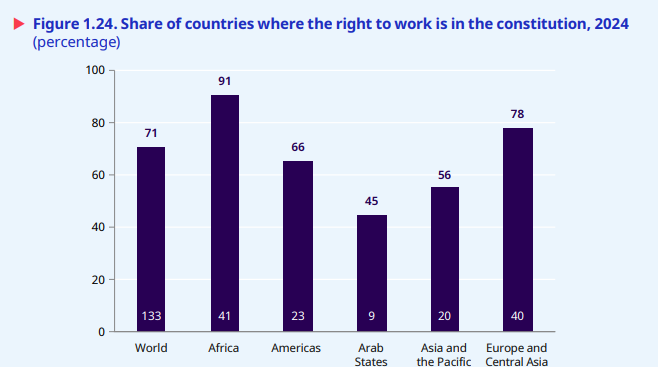
- 10 Oct 2025
In News:
The International Labour Organization (ILO) released its landmark report, “The State of Social Justice: A Work in Progress (2025)”, ahead of the Second World Summit for Social Development. The report marks three decades since the historic 1995 Copenhagen Summit and evaluates global efforts towards achieving justice, equality, and inclusion in a rapidly transforming world.
I. Purpose and Framework
The report assesses progress over 30 years in advancing social justice—defined as fair and equitable access to opportunities, rights, and resources—through four foundational pillars:
- Fundamental Human Rights and Capabilities – promoting freedom, equality, and universal social protection.
- Equal Access to Opportunities – removing barriers to education, employment, and fair wages.
- Fair Distribution – ensuring equitable sharing of the gains from economic growth.
- Fair Transitions – managing environmental, digital, and demographic shifts inclusively.
II. Global Progress: Achievements and Trends
1. Poverty and Labour Improvements
- Extreme Poverty fell sharply from 39% (1995) to 10% (2023).
- Working Poverty declined from 27.9% (2000) to 6.9% (2024).
- Labour Productivity per worker increased by 78% globally and by 215% in upper-middle-income countries, indicating narrowing productivity gaps between nations.
- Child Labour dropped from 20.6% (1995) to 7.8% (2024), driven by education access and monitoring systems.
2. Education and Skills
- Secondary school completion rates rose by 22 percentage points since 2000, underscoring significant human capital development.
3. Social Protection Expansion
- Over half of the global population is now covered by at least one form of social protection—pensions, healthcare, or income support—up from a marginal share in 1995.
III. Persistent Challenges
Despite these gains, the report warns that social justice remains “a work in progress,” with stark inequalities continuing to undermine inclusive growth.
1. Inequality and Wealth Concentration
- The top 1% of the global population controls 20% of income and 38% of total wealth.
- 800 million people still survive on less than US$3 per day, and one in four lacks access to safely managed drinking water.
2. Gender and Birth Inequalities
- Women earn 78% of men’s wages, and gender parity in labour participation has improved by only three percentage points since 1995.
- Nearly 71% of income outcomes globally are influenced by birth circumstances, reflecting entrenched structural inequities.
3. Informality and Job Quality
- 58% of workers remain in the informal economy, with limited access to labour rights and social protection.
- Collective bargaining rights have weakened globally, as reflected in declining compliance scores across income groups.
4. Declining Trust in Institutions
Confidence in governments, corporations, and unions has steadily eroded since the 1980s due to perceptions of unfair reward systems, corruption, and widening wealth gaps—posing risks to democratic stability.
IV. India in the Global Context
India mirrors many global patterns highlighted by the ILO but also shows unique progress in certain areas:
1. Poverty and Human Development
- Multidimensional poverty reduced from 29% (2013–14) to 11% (2022–23).
- Education: Secondary school completion rate reached 79% (2024), and female literacy stands at 77%.
- Digital Empowerment: The JAM trinity (Jan Dhan–Aadhaar–Mobile) enhanced direct benefit delivery and reduced leakages.
2. Social Protection and Welfare
Schemes such as PM-KISAN, Ayushman Bharat, and e-Shram have significantly extended coverage to over 55 crore unorganised workers. The Social Security Code (2020) further streamlined pension and maternity benefits.
3. Labour Market and Gender Gaps
- Informality remains high—over 80% of India’s workforce operates outside formal contracts.
- Female labour force participation has improved to 37% (PLFS 2024–25) but remains below the global average.
V. Managing Emerging Transitions
The ILO identifies three ongoing societal transitions that must be managed fairly to sustain progress:
- Climate Transition – Ensuring green jobs and protecting workers displaced by decarbonisation.
- Technological Transition – Bridging the digital divide through skills, reskilling, and inclusive access.
- Demographic Transition – Addressing challenges of ageing populations while leveraging youth dividends in developing countries.
To navigate these, the ILO recommends:
- Applying existing labour institutions to emerging contexts.
- Adapting them to specific transition challenges.
- Amplifying them by integrating labour concerns into climate, digital, and fiscal policies.
VI. ILO’s Key Recommendations
- Embed Social Justice Across Policies – Integrate equity into finance, trade, climate, and healthcare governance.
- Rebuild Trust in Institutions – Enhance transparency, accountability, and participatory policymaking.
- Invest in People – Expand education, skills, and lifelong learning to bridge gender and digital gaps.
- Strengthen Social Protection Systems – Aim for universal and portable coverage, backed by fair minimum wages.
- Promote Fair Transitions – Ensure environmental and technological shifts generate decent work.
- Enhance Global Cooperation – Reinforce multilateralism to manage migration, inequality, and global shocks.
WHO Global Report on Trends in Tobacco Use (2000–2024) and Projections (2025–2030)
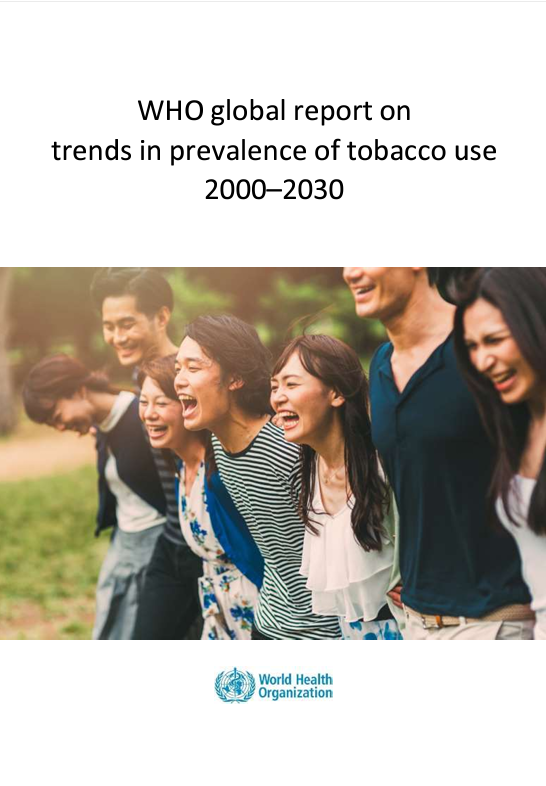
- 09 Oct 2025
In News:
The World Health Organization (WHO) released its latest report on global tobacco use, covering trends from 2000 to 2024 and projecting patterns through 2030. The report provides insights into the prevalence of tobacco consumption among individuals aged 15 years and above and assesses progress toward global reduction targets.
Global Tobacco Trends
- Declining Prevalence: Adult tobacco use worldwide decreased from 26.2% in 2010 to 19.5% in 2024.
- Continued Burden: Despite progress, approximately 1 in 5 adults still consumes tobacco.
- Rise of E-Cigarettes: Over 100 million people use e-cigarettes globally, introducing new regulatory and public health challenges.
India’s Tobacco Landscape
- Users (2024): Around 243.48 million Indians aged 15 and above consume tobacco.
- Global Ranking: India is the 2nd largest producer (after China) and 2nd largest exporter (after Brazil) of tobacco.
- Progress: India is projected to achieve a 43% reduction in prevalence between 2010–2025, surpassing the WHO’s NCD target of 30% reduction.
Measures to Control Tobacco Use in India
- Cigarettes and Other Tobacco Products Act (COTPA), 2003:
- Prohibits smoking in public areas.
- Bans tobacco advertising.
- Restricts sales to minors.
- Mandates packaging and labeling standards.
- Prohibition of Electronic Cigarettes Act, 2019:Outlaws theproduction, import, sale, and promotion of e-cigarettes and similar devices.
- National Tobacco Control Programme (NTCP, 2007–08):
- Promotes awareness of health risks associated with tobacco.
- Aligns with the WHO Framework Convention on Tobacco Control (FCTC).
- Tobacco-Free Film Rules, 2024:Enforces restrictions on tobacco depiction in films and television content.
- Yellow Line Campaign:Marks 100-yard boundaries around schools to enforce tobacco sales bans.
- Taxation and Pricing:Incremental hikes in excise and GST duties on tobacco products, though experts suggest further increases to maximize impact.
About Tobacco (Nicotiana tabacum)
- Botanical Profile: An annual herbaceous plant, native to tropical/subtropical South America, widely cultivated globally.
- Cultivation Requirements:
- Frost-free period of 90–120 days.
- Optimal temperature: 20–30°C.
- Rainfall: Minimum 500 mm; thrives in well-drained sandy loam or alluvial soils.
- Nicotine Content: All parts (except seeds) contain nicotine (2–8%), predominantly concentrated in the leaves (~64% of total plant nicotine).
Significance
The WHO report highlights that while tobacco use is declining globally, substantial public health efforts are still needed, particularly in regulating emerging products like e-cigarettes. India’s multi-pronged approach—legal frameworks, awareness campaigns, taxation, and innovative interventions—demonstrates a strong commitment to achieving tobacco-free goals by 2025.
Nobel Prize in Physiology or Medicine 2025
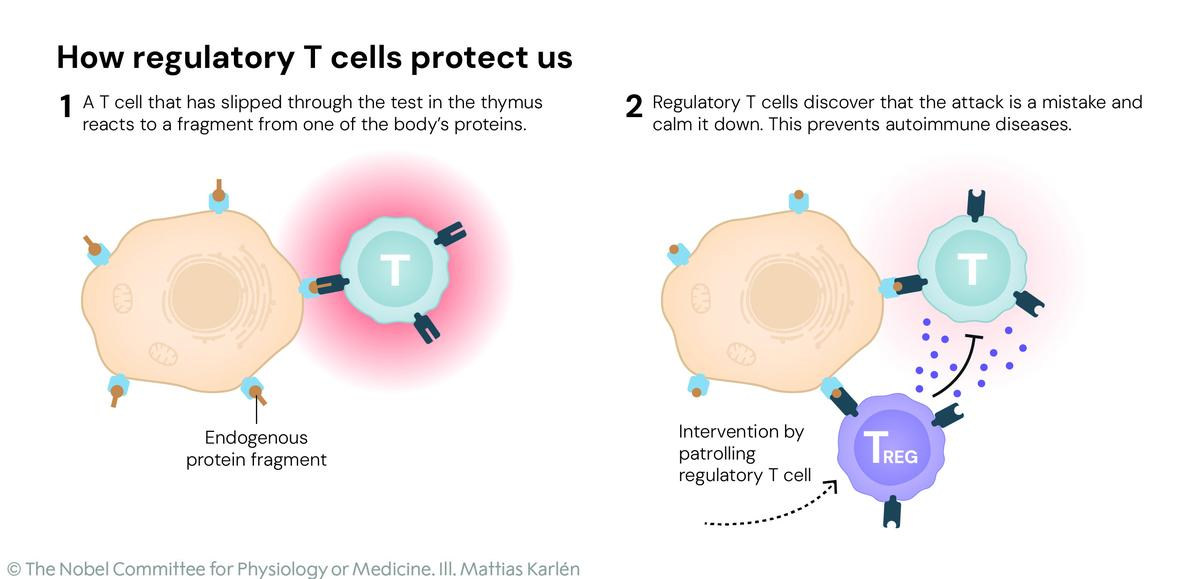
- 09 Oct 2025
In News:
The 2025 Nobel Prize in Physiology or Medicine was awarded jointly to Mary Brunkow, Fred Ramsdell, and Shimon Sakaguchi for their pioneering work on peripheral immune tolerance. Their research identified the critical role of regulatory T-cells (Tregs) in preventing the immune system from attacking the body’s own tissues.
The Human Immune System
The immune system protects the body against harmful pathogens, including bacteria, viruses, fungi, and parasites. It is composed of:
- Organs: Bone marrow, thymus, spleen, lymph nodes, and tonsils.
- Cells: White blood cells (leukocytes), including lymphocytes, macrophages, and neutrophils.
- Molecules: Antibodies, cytokines, and complement proteins.
Its central challenge is distinguishing between harmful invaders and the body’s own healthy cells, including those altered by mutation or cancer.
B-Cells and T-Cells
Lymphocytes, including B-cells and T-cells, are key players in immune defense.
- B-cells: Produce antibodies to neutralize antigens. Main types include plasma cells and memory cells.
- T-cells: Originate in the bone marrow, mature in the thymus, and migrate to lymphoid tissues and the bloodstream. Types include:
- Cytotoxic T-cells: Destroy virus-infected and tumor cells.
- Helper T-cells: Coordinate immune responses by signaling other immune cells.
- Regulatory T-cells (Tregs): Suppress excessive immune activity, preventing autoimmune reactions and maintaining self-tolerance.
Discovery and Significance
The laureates’ research revealed regulatory T-cells as the immune system’s “security guards,” preventing it from attacking the body.
Key implications:
- Advanced understanding of peripheral tolerance, the mechanism by which the immune system avoids self-damage.
- Informed the development of therapies for autoimmune diseases, cancer, transplantation, and chronic inflammatory conditions.
- Highlighted that tumors may recruit Tregs to evade immune destruction, providing insights for cancer immunotherapy.
The discovery reshaped immunology by showing that the immune system is not solely attack-oriented, but also self-regulating.
About the Nobel Prize
- Established: 1901, through Alfred Nobel’s will (largest share of his fortune dedicated).
- Fields: Physics, Chemistry, Physiology or Medicine, Literature, Peace; Economics added in 1968.
- Awarding Institutions:
- Karolinska Institute: Physiology or Medicine
- Royal Swedish Academy of Sciences: Physics, Chemistry, Economics
- Swedish Academy: Literature
- Norwegian Nobel Committee: Peace Prize
- Award Venues: Stockholm (all except Peace), Oslo (Peace Prize)
- Administration: Managed by the Nobel Foundation, independent of prize selection.
Selection Process:
- Nominations are invited from qualified individuals (scientists, professors, former laureates).
- Expert committees evaluate candidates and recommend winners.
- Final decisions rest with the respective Nobel institutions.
Mig La Pass
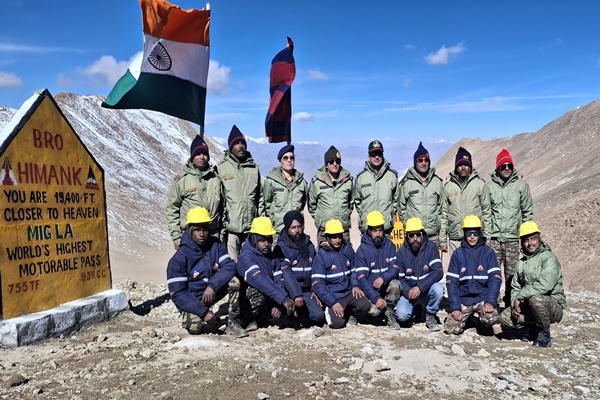
- 09 Oct 2025
In News:
The Border Roads Organisation (BRO), through Project Himank, has constructed the world’s highest motorable road at Mig La Pass in Ladakh, situated at 19,400 feet above sea level, surpassing the previous record held by Umling La (19,024 ft) in 2021. This achievement highlights India’s engineering capability and strategic preparedness in high-altitude border areas.
About Mig La Pass
- Location: Changthang Plateau, Ladakh.
- Altitude: 19,400 ft, making it the highest motorable road in the world.
- Strategic Significance:
- Connects Likaru–Mig La–Fukche, forming a third vital corridor from Hanle to Fukche, near the Indo-China border.
- Enhances logistical and military mobility, strengthening access to forward areas close to the Line of Actual Control (LAC).
- Engineering Features:
- All-weather road capable of withstanding harsh winters, shifting glaciers, and low oxygen conditions.
- Designed for continuous vehicular movement, critical for both military and civilian access.
- Tourism Potential: Provides panoramic views of the Indus Valley, potentially boosting local tourism.
Project Himank
- Established: 4 December 1985 at Leh, to develop road communication in Ladakh’s challenging terrain.
- Operational Scope: Works in high-altitude regions with short working seasons and extreme climatic conditions.
- Contributions:
- Supports the Indian Army in operations, logistics, and connectivity.
- Ensures maintenance of key routes, including the Leh-Manali and Zojila axes.
- Executes landslide and avalanche clearance, bridge construction, and snow removal.
- Aids in restoring road communication and opening airfields in remote areas.
- Engineering Excellence: Demonstrates BRO’s capability to construct durable infrastructure under extreme terrain, low oxygen, and sub-zero temperatures.
Coral Larvae Cryobank
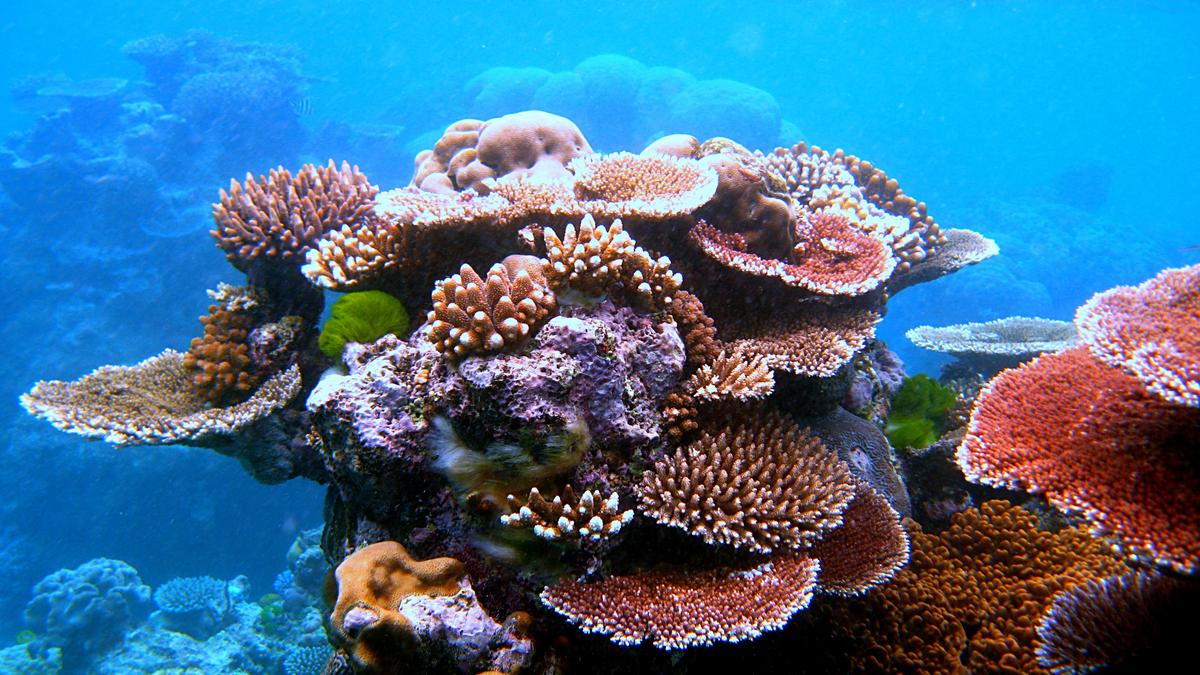
- 09 Oct 2025
In News:
In a significant step toward marine conservation, the Philippines has established Southeast Asia’s first coral larvae cryobank, aimed at safeguarding coral genetic diversity and restoring threatened reef ecosystems. The initiative marks a pioneering regional collaboration among research institutions in the Philippines, Taiwan, Indonesia, Malaysia, and Thailand.
About the Coral Cryobank Initiative
- The Coral Larvae Cryobank is designed to freeze and store coral larvae at ultra-low temperatures, thereby preserving their genetic material for future reef restoration.
- It is part of a regional conservation programme supported by the Coral Research & Development Accelerator Platform, with technical guidance from Dr. Chiahsin Lin and the University of the Philippines Marine Science Institute.
- The cryobank acts as a “genetic insurance policy” to protect coral biodiversity in the face of rising ocean temperatures, pollution, and habitat destruction.
Cryopreservation: The Science Behind It
Cryopreservation is a process of preserving living cells or tissues at –196°C using liquid nitrogen, which halts all biological activity.
- Cryoprotectant solutions (such as glycerol, DMSO, and ethylene glycol) are used to prevent ice crystal formation that can damage cells.
- The process of vitrification converts the larvae into a glass-like state, allowing them to remain intact indefinitely.
- Laser-assisted thawing enables rapid revival of viable coral larvae, which can later be used for reef restoration and rehabilitation.
This technique ensures that coral genetic material remains preserved even if wild populations are damaged by bleaching events or ocean warming.
The Coral Triangle: The ‘Amazon of the Seas’
- The Coral Triangle, often termed the “Amazon of the Seas”, spans about 6 million sq. km across Indonesia, Malaysia, Papua New Guinea, the Philippines, Solomon Islands, and Timor-Leste.
- It covers two major biogeographic regions — the Indonesian–Philippines Region and the Far Southwestern Pacific Region — and represents the richest marine biodiversity hotspot on Earth.
Key Features
- Home to over 75% of global coral species and one-third of all reef fish.
- Supports six of the world’s seven marine turtle species.
- Sustains the livelihoods and food security of over 120 million people.
- Hosts vast mangrove forests and seagrass ecosystems, critical for carbon sequestration and coastal protection.
Threats to Coral Ecosystems
The Coral Triangle faces escalating threats due to climate change and anthropogenic pressures.
- Rising sea temperatures trigger coral bleaching, where corals expel symbiotic algae (zooxanthellae), turning white and losing energy sources.
- The Status of Coral Reefs of the World 2020 report found that 14% of the world’s corals were lost between 2009 and 2018.
- Projections indicate that 70–90% of live corals could vanish by 2050 without effective conservation.
- Destructive fishing, coastal pollution, and unregulated tourism further degrade reef habitats.
Understanding Corals
- Corals are marine invertebrates belonging to the Cnidaria phylum.
- They consist of tiny organisms called polyps, which secrete calcium carbonate skeletons that form coral reefs.
- The color of corals arises from symbiotic algae within their tissues, essential for nutrient exchange.
- Types of coral reefs:
- Fringing reefs – develop along shorelines
- Barrier reefs – found in open water separated from land by lagoons
- Atolls – circular reefs surrounding submerged volcanoes
- Coral reefs act as nurseries for one-fourth of all marine life, providing food, shelter, and breeding grounds.
Significance of Coral Cryobanking
The cryobank serves as a long-term safeguard for coral biodiversity by ensuring viable genetic material remains preserved even in the event of large-scale reef degradation.
Key benefits include:
- Conservation of genetic diversity for future breeding and research.
- Restoration of degraded reefs through reintroduction of cryopreserved larvae.
- Strengthening regional resilience against climate-induced coral loss.
- Promotion of scientific cooperation across Southeast Asian nations.
Paramparagat Krishi Vikas Yojana (PKVY)
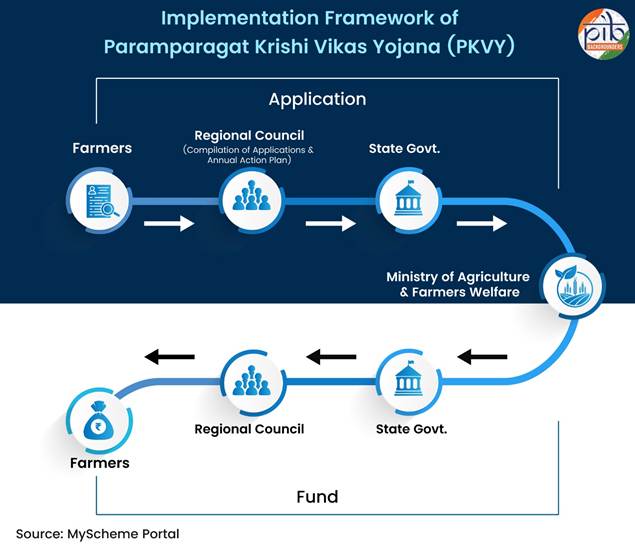
- 09 Oct 2025
In News:
The Paramparagat Krishi Vikas Yojana (PKVY), launched in 2015 under the National Mission for Sustainable Agriculture (NMSA), is India’s flagship programme to promote organic farming. Over the past decade, it has become central to the country’s efforts to shift from input-intensive agriculture toward sustainable, eco-friendly, and farmer-led models of food production.
Rationale and Need
Indian agriculture, though rooted in traditional knowledge, has witnessed increasing soil degradation, declining biodiversity, and rising chemical dependence. PKVY aims to restore ecological balance, ensure food safety, and enhance farmer incomes through a structured transition to organic farming.
Key Objectives
- Promote chemical-free, eco-agriculture and improve soil health.
- Support farmer collectives in production, certification, and marketing.
- Ensure sustainable income generation through premium pricing and reduced input costs.
- Build domestic and export markets for certified organic products.
- Foster climate-resilient agriculture and biodiversity conservation.
Implementation Framework
PKVY operates on a cluster-based model, where farmers are mobilized in groups of 20 hectares to adopt organic practices collectively.
Each participating farmer receives ?31,500 per hectare for three years, distributed as:
- ?15,000 for on-farm/off-farm organic inputs (via DBT)
- ?4,500 for marketing, packaging & branding
- ?3,000 for certification and residue analysis
- ?9,000 for training & capacity building
Implementation follows a bottom-up approach:
- Farmers approach Regional Councils, which compile and submit Annual Action Plans to the Ministry of Agriculture & Farmers Welfare.
- Funds are released by the Centre to States, and then to farmers through Direct Benefit Transfer (DBT), ensuring transparency and timely assistance.
Eligibility is open to all farmers and institutions, with a landholding limit of two hectares per beneficiary.
Organic Certification Framework
To ensure market credibility, PKVY integrates two certification systems:
- National Programme for Organic Production (NPOP):
- Administered by the Ministry of Commerce & Industry.
- A third-party certification ensuring compliance with global organic standards for production, processing, and exports.
- Participatory Guarantee System (PGS-India):
- Operated by the Ministry of Agriculture & Farmers Welfare.
- A community-based, peer-review system allowing small and marginal farmers to self-certify through mutual verification.
- Recognized for the domestic market under the Jaivik Bharat logo.
To accelerate certification, the Large Area Certification (LAC) programme was launched in 2020–21 for areas where chemical farming was never practiced—such as tribal belts, islands, and eco-preserved zones. The LAC model reduces the conversion period from 2–3 years to a few months.
Associated Initiatives
- Mission Organic Value Chain Development for North Eastern Region (MOVCDNER): Supports organic farming in the NE states through value-chain and market linkages.
- Jaivik Kheti Portal: A digital marketplace connecting farmers, buyers, and input suppliers for direct sale of organic produce.
- Formation of 10,000 Farmer Producer Organizations (FPOs): Strengthening collective marketing and input access for organic producers.
India’s Organic Landscape
- India ranks 4th globally in certified organic area (IFOAM, 2022) and 1st in the number of organic farmers.
- Madhya Pradesh has the largest certified area, followed by Maharashtra, Rajasthan, Gujarat, and Karnataka.
- Organic exports: valued at $708 million (2022–23), with global market potential exceeding $138 billion.
Ortolan Bunting
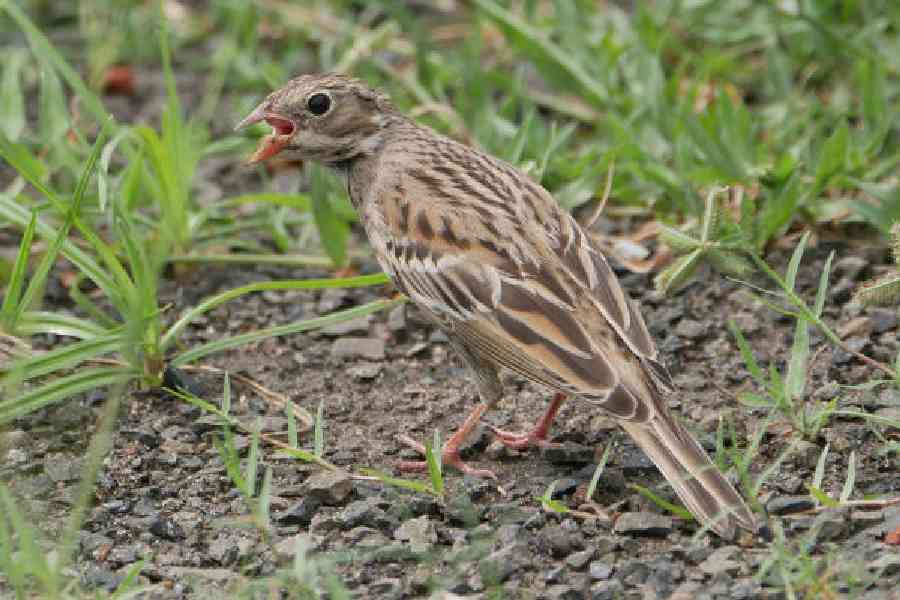
- 08 Oct 2025
In News:
A rare European migratory bird, the Ortolan Bunting (Emberizahortulana), was recently spotted in Baruipur, on the southern outskirts of Kolkata, West Bengal. This marks only the second recorded sighting of the species in the state, with the last being in the Sundarbans in 2014.
About Ortolan Bunting:
- Scientific Name:Emberizahortulana
- Type: Small Palearctic migratory songbird
- Distribution: Native to Europe and parts of Central Asia, extending east to Mongolia and north to the Arctic Circle.
- Migration: The species typically migrates to sub-Saharan Africa during the winter months.
Habitat and Characteristics:
- Preferred Habitat: Open or semi-open agricultural lands, slopes, and grasslands with scattered shrubs; generally avoids dense forests and oceanic climates.
- Altitude Range: Found up to 2,500 metres in suitable habitats.
- Physical Features:
- Length: 16–17 cm; Wingspan: about 25 cm.
- Males have a greenish-grey head, yellow throat, and brown-streaked body.
- Females and juveniles are smaller and duller, with spotted underparts.
- Possess a conical beak suited for cracking seeds.
Conservation Status:
- IUCN Red List: Least Concern
Despite its status, the Ortolan Bunting faces population decline in parts of Europe due to habitat loss and illegal hunting — particularly in France, where it was once considered a delicacy.
Significance of the Sighting:
- Highlights the importance of citizen-led biodiversity monitoring through platforms like eBird and BirdForum.
- Suggests potential changes in migratory routes, possibly influenced by climatic shifts.
- Reinforces West Bengal’s ecological diversity, which continues to attract rare and migratory bird species.
PM-SETU Scheme
- 08 Oct 2025
In News:
- Prime Minister Narendra Modi launched a series of youth-focused initiatives worth over ?62,000 crore, aimed at empowering India’s young population through education, skill development, and entrepreneurship.
- The announcements were made during the Kaushal DeekshantSamaroh held at Vigyan Bhawan, New Delhi, marking a significant step toward building a future-ready workforce aligned with global skill demands.
Pradhan Mantri Skilling and Employability Transformation through Upgraded ITIs (PM–SETU)
The centrepiece of the event was the launch of the PM–SETU scheme — a centrally sponsored initiative with an investment of ?60,000 crore. The scheme seeks to revitalize Industrial Training Institutes (ITIs) across India, transforming them into modern, industry-linked centers of skill excellence.
Key Features of PM–SETU
- Coverage: Transformation of 1,000 Government ITIs into modern, technology-driven institutes.
- Implementation Model:
- Based on a Hub-and-Spoke structure, comprising 200 hub ITIs connected to 800 spoke ITIs.
- Hub ITIs will host innovation centers, incubation units, production facilities, and training-of-trainers setups.
- Spoke ITIs will extend outreach, ensuring skill accessibility to smaller towns and semi-urban regions.
- Curriculum and Industry Linkage:
- Introduction of new demand-driven courses and modernization of existing ones in collaboration with industry partners.
- Establishment of Special Purpose Vehicles (SPVs) with anchor industries to ensure cluster-based training and employability outcomes.
- Academic Integration: Creation of pathways for short-term training, executive programs, and long-term diploma courses to align with higher education and employment opportunities.
- Centres of Excellence: Strengthening of five National Skill Training Institutes—
- Bhubaneswar (Odisha)
- Chennai (Tamil Nadu)
- Hyderabad (Telangana)
- Kanpur (Uttar Pradesh)
- Ludhiana (Punjab)
These will serve as global-level Centres of Excellence through partnerships with leading international institutions.
- Global Collaboration: The initiative is co-financed by the World Bank and the Asian Development Bank (ADB), with the first phase focusing on Patna and Darbhanga ITIs in Bihar.
Other Youth-Focused Announcements
- Vocational Skill Labs: Inauguration of 1,200 vocational skill labs across 400 Jawahar Navodaya Vidyalayas (JNVs) and 200 Eklavya Model Residential Schools spread across 34 States and Union Territories, to integrate skill education at the school level.
- Bihar’s Revamped MukhyamantriNishchay Swayam Sahayata Bhatta Yojana:
- Under the revamped scheme, five lakh graduate youth in Bihar will receive a monthly allowance of ?1,000 for two years, along with free skill training.
- The scheme aims to enhance youth employability and entrepreneurship readiness.
- Karpoori Thakur Skill University: A Skill University named after Bharat RatnaKarpoori Thakur will be established to honor his contribution to social empowerment and education.
- Recognition of Excellence: The Prime Minister also felicitated 46 All India Toppers from Industrial Training Institutes (ITIs) under the Ministry of Skill Development and Entrepreneurship (MSDE).
MeerKAT Radio Telescope
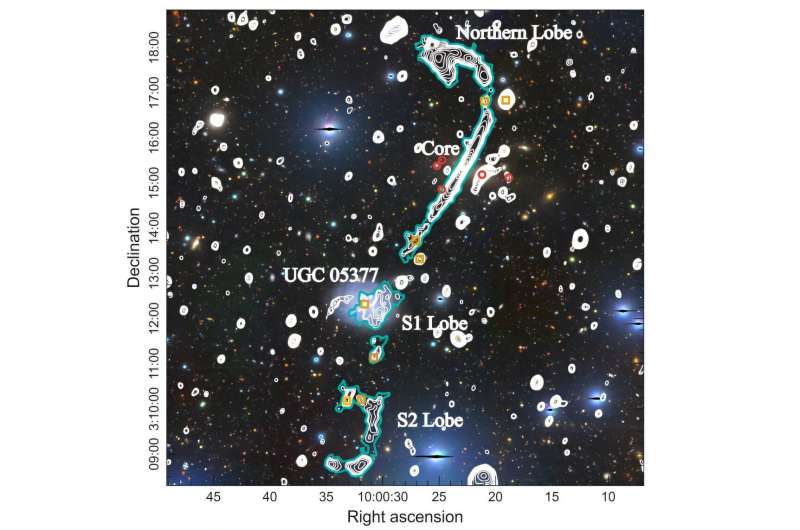
- 08 Oct 2025
In News:
An international team of astronomers has recently used South Africa’s MeerKAT Radio Telescope to identify a new giant radio galaxy (GRG) within the COSMOS field, as part of the MeerKAT International GHz Tiered Extragalactic Exploration (MIGHTEE) survey. The discovery, published on November 11, offers valuable insights into the formation and evolution of radio galaxies and the large-scale structure of the universe.
About the MeerKAT Radio Telescope
- Location: Situated in the Northern Cape province of South Africa, MeerKAT is a world-class radio interferometer operated by the South African Radio Astronomy Observatory (SARAO).
- Origin: Initially conceptualized as the Karoo Array Telescope (KAT) with 20 dishes, its scope was later expanded to 64 dishes, leading to its renaming as “MeerKAT” (meaning “more of KAT”).
- Specifications: Each dish measures 13.5 meters in diameter, spread across a maximum distance of 8 km.
- Technology: Signals received by individual dishes are transmitted to a central processor, allowing them to function collectively as a single, high-resolution telescope.
- Purpose:MeerKAT is a precursor instrument for the Square Kilometre Array (SKA) — the world’s largest and most sensitive radio telescope project, aimed at exploring the origin and evolution of the universe.
- Significance: Currently, MeerKAT is among the most powerful radio interferometers operating at centimetre wavelengths, enabling detailed observations of distant cosmic structures.
About Radio Galaxies
A radio galaxy is a type of galaxy that emits intense radio waves extending far beyond its visible boundaries. These emissions typically arise from jets and lobes of plasma produced by the galaxy’s active galactic nucleus (AGN), which is powered by a supermassive black hole.
The interaction of these jets with surrounding matter generates synchrotron radiation, making such galaxies prominent sources of radio emissions in the cosmos.
The Discovery: MGTC J100022.85+031520.4
Using MeerKAT’s advanced capabilities, astronomers identified a new giant radio galaxy (designated MGTC J100022.85+031520.4) within the COSMOS field.
Key Characteristics:
- Host Galaxy: Elliptical galaxy SDSS J100022.85+031520
- Redshift: Approximately 0.1034
- Size: About 4.2 million light years in projected length — qualifying it as a Giant Radio Galaxy (GRG)
- Mass: Nearly 93 trillion solar masses
- Radio Power:597 ZW/Hz at 1,284 MHz
- Age: Estimated 1 billion years
- Jet Power: Around 1 million QW
- Location: Identified as the Brightest Cluster Galaxy (BCG) within the galaxy cluster WHL J100022.9+031521
This makes it one of the few (around 4%) known GRGs that exist within a cluster environment rather than in isolated regions.
Baratang Island
- 08 Oct 2025
In News:
India’s only mud volcano, located at Baratang Island in the Andaman and Nicobar Islands, has erupted again after more than two decades.
About Baratang Island
- Location:Baratang Island lies in the North and Middle Andaman district, approximately 150 km from Port Blair.
- Geological Uniqueness: It is home to India’s only known mud volcanoes, making it a prominent site for geological study and eco-tourism.
- Tribal Presence: The region is also inhabited by the Jarawa tribe, one of the indigenous groups of the Andaman and Nicobar Islands.
- Previous Activity: The last major eruption occurred in 2005, which was attributed to seismic activity and oceanic tectonic movements in the region.
What are Mud Volcanoes?
- Definition: Mud volcanoes, also known as “mud domes,” are geological structures formed by the eruption of mud slurries, gases, and water rather than molten rock.
- Formation Process:
- They occur when gases (mainly methane, with traces of carbon dioxide or nitrogen), generated from the decay of organic matter deep underground, force a mixture of mud and water to the surface.
- This process creates cone-shaped mounds or domes resembling typical volcanoes, but without lava.
- Characteristics:
- Their temperature is much lower than that of igneous volcanoes.
- They can range from a few meters to several hundred meters in height and up to 10 km in width.
- Some mud volcanoes also exist underwater, influencing seabed topography and occasionally forming new landforms or islands.
Comparison with Barren Island Volcano
- Barren Island, another volcanic site in the Andaman region, witnessed minor eruptions in September 2025—on the 13th and 20th.
- It is located about 140 km northeast of Port Blair and is India’s only active volcanic island, lying at the junction of the Indian and Burmese tectonic plates.
- Historical records show eruptions at Barren Island in 1787, 1991, 2005, 2017, and 2022.
- Officials have clarified that the Baratang mud volcano and the Barren Island volcano are distinct geological entities—the former being sedimentary and gas-driven, while the latter is igneous and magma-driven.
Significance and Precautions
- The Baratang eruption underscores the geological dynamism of the Andaman and Nicobar region, which lies in a seismically active zone due to the subduction of the Indian Plate beneath the Burmese Plate.
- Tourism and Safety: The site is a popular tourist attraction, but safety protocols have been enforced to prevent accidents.
- Scientific Importance: Such eruptions provide valuable insights into subsurface gas activity, tectonic movement, and geothermal processes in the region.
Stable Coins
- 08 Oct 2025
In News:
The Union Finance Minister recently emphasized that countries must be prepared to engage with stablecoins, noting that rapid innovations in the cryptocurrency space are reshaping the global monetary order.
What are Stablecoins?
- Stablecoins are a category of cryptocurrencies designed to maintain a steady value by being linked to a reference asset—most often a fiat currency like the U.S. dollar, though they may also be tied to commodities or a basket of currencies.
- Unlike volatile digital assets such as Bitcoin or Ethereum, stablecoins are meant to minimize price fluctuations, making them more practical for payments, remittances, and everyday transactions within blockchain-based systems.
Types of Stablecoins
1. Fully-Backed (Collateralized) Stablecoins
- Definition: These stablecoins are backed one-to-one by tangible, high-quality assets held in reserve—typically cash, government securities, or other liquid instruments.
- Mechanism: For every coin issued, there is an equivalent amount of the pegged asset held in custody. This ensures that users can redeem their tokens for fiat currency at a fixed rate, maintaining stability and user trust.
2. Algorithmic Stablecoins
- Definition: These coins are not supported by actual reserves but rely on pre-programmed algorithms to keep their value stable.
- Mechanism:
- When the coin’s price rises above its target value, the algorithm issues more tokens to increase supply.
- When the price falls below the peg, the system removes tokens from circulation to reduce supply.
This self-adjusting mechanism helps maintain price equilibrium without physical collateral.
Key Features and Advantages
- Price Stability: Designed to minimize volatility, stablecoins are suitable for trade, payments, and as a safe asset within the crypto ecosystem.
- Transaction Efficiency: They enable instant and low-cost transfers, particularly across borders, reducing reliance on traditional intermediaries.
- Programmability: Being digital and blockchain-based, stablecoins can be easily integrated into smart contracts and decentralized finance (DeFi) systems, automating financial operations.
- Digital Representation of Fiat: They serve as a blockchain version of national currencies, facilitating real-time settlements and bridging traditional and digital finance.
Snow Leopard
- 07 Oct 2025
In News:
- A recent survey by the Wildlife Wing of the Himachal Pradesh Forest Department has revealed that the state now hosts 83 adult snow leopards, a notable increase from the 51 recorded in 2021.
- Conducted over one year with strong community participation, the assessment marks Himachal Pradesh as the first state in India to carry out a second state-wide snow leopard survey, providing a robust baseline for future conservation efforts.
About Snow Leopards (Panthera uncia):
- Known as the “ghost of the mountains”, snow leopards are large, elusive wild cats and serve as important indicator species for fragile high-altitude ecosystems.
- State Animal: Himachal Pradesh
- Distribution: Native to high mountains across 12 countries in Central and South Asia, including Afghanistan, China, India, Nepal, and Mongolia. In India, found in Western Himalayas (J&K, Ladakh, Himachal Pradesh, Uttarakhand) and Eastern Himalayas (Sikkim, Arunachal Pradesh).
- IUCN Status: Vulnerable (VU)
Key Characteristics:
- Physical Traits: Thick white-grey fur with dark rosettes for camouflage; powerful hind legs for leaping across rugged terrain.
- Diet: Carnivorous—feeds on blue sheep, Himalayan ibex, marmots, pikas, hares, and other high-altitude prey.
- Habitat & Territory: Prefers cold deserts and rocky slopes above 3,000 m, sometimes reaching 5,500 m; requires large territories (5–190 sq miles) due to low prey density.
- Behavior: Solitary and territorial, mostly nocturnal and elusive.
Survey Highlights:
- Conducted across six sites covering Himachal’s 26,000 sq km snow leopard habitat using camera traps.
- Snow leopards recorded in core areas such as Lahaul-Spiti, Kinnaur, and Pangi Valley, and also beyond protected areas like Kibber Wildlife Sanctuary, Great Himalayan National Park, Sechu Tuan Nala, and Asrang Wildlife Sanctuary.
- Prey and Biodiversity: Updated distribution maps for blue sheep, Himalayan ibex, musk deer, Himalayan wolves, brown bears, red foxes, leopards, and martens. First official sighting of Pallas’s cat in Kinnaur and rediscovery of the woolly flying squirrel in Lahaul.
Cyclone Shakhti
- 07 Oct 2025
In News:
Recently, the India Meteorological Department (IMD) confirmed the formation of Cyclone Shakhti over the northeast Arabian Sea. Named by Sri Lanka under the World Meteorological Organisation’s regional naming system, Shakhti is a tropical cyclonic storm forming approximately 340 km west of Dwarka, Gujarat.
Formation and Track:
The cyclone developed due to low-pressure systems over the warm Arabian Sea waters in early October 2025. IMD reports indicate:
- Shakhti intensified into a Cyclonic Storm (CS) on 3 October and was forecasted to become a Severe Cyclonic Storm (SCS) by 4 October.
- Initially moving west-northwest, it is likely to track west-southwest, reaching central parts of the north and adjoining central Arabian Sea by 5 October.
- A subsequent recurvature is expected, moving east-northeastward from 6 October.
Significance:
The occurrence of Cyclone Shakhti highlights the increasing cyclonic activity in the Arabian Sea, historically less active than the Bay of Bengal. Warmer sea surface temperatures have led to the rapid intensification of recent cyclones, including Tauktae (2021) and Biparjoy (2023), off India’s west coast.
Comparative Context:
- The Bay of Bengal experiences more cyclones due to semi-enclosed waters retaining warmth (29–30°C), abundant moisture from rivers and monsoon flows, and low-pressure pulses from Pacific typhoons.
- In contrast, the Arabian Sea is cooler, influenced by dry winds from Oman and Yemen, and lacks such external triggers, which traditionally limited cyclone intensity.
- Rising temperatures, however, are changing this pattern, making the Arabian Sea increasingly prone to severe cyclones.
Dhvani Missile
- 07 Oct 2025
In News:
India is on the verge of a historic breakthrough with the upcoming test of Dhvani, a cutting-edge hypersonic missile developed by the Defence Research and Development Organisation (DRDO). This missile positions India among an elite group of nations with hypersonic capabilities, including the United States, Russia, and China.
About Dhvani:
- Dhvani is being developed as a Hypersonic Glide Vehicle (HGV), capable of speeds exceeding Mach 5 (over 7,400 km/h).
- Unlike conventional missiles that follow predictable trajectories, Dhvani is launched to extreme altitudes and then glides toward its target with high maneuverability, making detection and interception extremely difficult. It is designed to strike both land-based and maritime targets with precision.
- Estimated ranges are 6,000 to 10,000 kilometers, potentially doubling the reach of India’s current Agni-V intercontinental ballistic missile.
Design and Technology:
- Dimensions: Approximately 9 meters long and 2.5 meters wide with a blended wing-body configuration.
- Heat Protection: Uses ultra-high-temperature ceramic composites to withstand 2,000–3,000°C during atmospheric reentry.
- Stealth Features: Angled surfaces and smooth contours reduce radar visibility.
- Indigenous Development: Built on technologies demonstrated by the Hypersonic Technology Demonstrator Vehicle (HSTDV), including scramjet propulsion and thermal shielding.
Strategic Implications:
The Dhvani missile significantly enhances India’s strategic deterrence, creating a technological edge in South Asia. Its ability to perform unpredictable maneuvers during the terminal phase renders most current missile defense systems ineffective, thereby deterring adversaries.
Global Context:
Dhvani is comparable to China’s DF-ZF, Russia’s Avangard, and U.S. programs such as Dark Eagle and HACM, which face developmental delays. India’s achievement demonstrates self-reliance in critical defense technologies and strengthens its capability for both regional security and global power projection.
Compressive Asphyxia
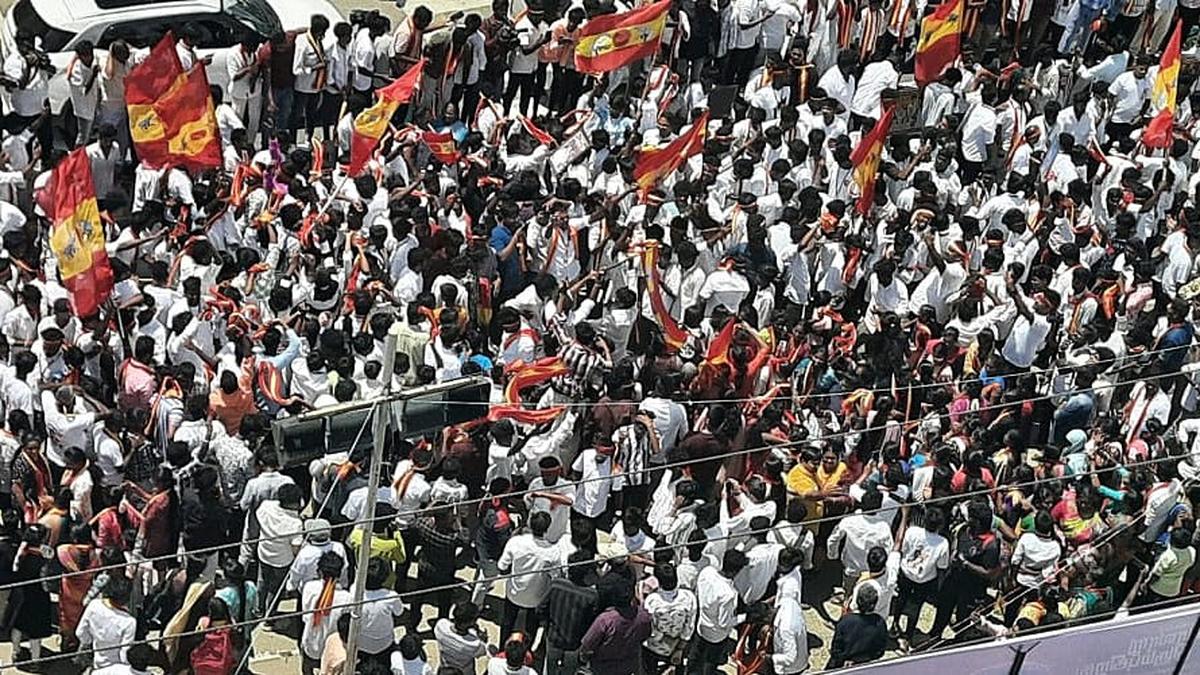
- 07 Oct 2025
In News:
The recent tragic stampede at a rally of TamilagaVetriKazhagam (TVK) in Velusamypuram, Tamil Nadu, resulted in 41 deaths, including nine children. Doctors have attributed most fatalities to compressive asphyxia, highlighting the dangers of overcrowded events in India.
What is Asphyxia?
Asphyxia, or asphyxiation, occurs when the body does not receive sufficient oxygen. Normally, respiration allows oxygen to circulate via blood to all cells while removing carbon dioxide. In asphyxia, inadequate oxygen can lead to unconsciousness, organ failure, or death.
Types of Asphyxia:
Medical literature classifies asphyxia into several types:
- Mechanical Asphyxia: Physical obstruction preventing normal breathing.
- Traumatic Asphyxia: Strong external force on the thoracic cavity causes blood to backflow to the brain.
- Perinatal Asphyxia: Insufficient oxygen before, during, or shortly after birth.
- Compressive Asphyxia: External pressure on the chest or abdomen prevents expansion of the lungs.
- Other Types: Include suffocation, chemical asphyxia, strangulation, and drowning.
Compressive Asphyxia in Crowds:
In large gatherings or stampedes, people can be pressed tightly against each other. The diaphragm, a key muscle for breathing, cannot contract effectively, preventing inhalation and exhalation. This leads to oxygen deprivation (hypoxia) and carbon dioxide buildup (hypercapnia), which can cause organ failure and death.
Crowd Density and Risk:
- Safe crowd density: up to 5 persons per square metre.
- Densities above 6–7 per square metre significantly increase the risk of compressive asphyxia.
- The UK’s Green Guide suggests a maximum of 4.7 persons per square metre for standing areas in public venues.
Preventive Measures:
To stay safe in crowds:
- Assess venue layout and crowd capacity.
- Be aware of weather conditions.
- Move with a partner and identify safe meeting points.
- Wear bright clothing and note all exit routes.
- Move diagonally or sideways to reach open spaces.
- Exit early if the situation feels unsafe.
Dark Stars

- 07 Oct 2025
In News:
Recent astronomical observations have provided evidence for the existence of “dark stars,” a hypothesized class of the earliest stars in the universe. Unlike conventional stars powered by nuclear fusion, dark stars are thought to derive their energy from dark matter annihilation.
What Are Dark Stars?
- Dark stars are believed to have existed in the early universe and may represent the first phase of stellar evolution. These stars are immense, potentially 400 to 200,000 times larger and 500 to 1,000 times more massive than the Sun. Despite their size, they are not very hot because their energy source is dark matter heating rather than nuclear fusion.
- Unlike ordinary stars, dark stars are giant, puffy clouds rather than compact objects. They could shine as brightly as an entire early galaxy, emitting gamma rays, neutrinos, and possibly antimatter, but remain largely invisible in visible light. This explains why they have remained undetected until recent observations.
Recent Discoveries:
Data from the James Webb Space Telescope (JWST) has identified four candidate dark stars whose light profiles align with theoretical predictions for supermassive dark stars. If confirmed, these findings could:
- Explain the presence of unusually bright objects in the early universe.
- Offer insights into the formation of the first supermassive black holes, a longstanding puzzle in cosmology.
Significance for Cosmology:
Understanding dark stars provides crucial insights into:
- The role of dark matter in early stellar evolution.
- The transition from the first stars to the formation of galaxies and black holes.
- The evolution of the universe’s luminous structure in its formative stages.
Akshar Fast Patrol Vessel
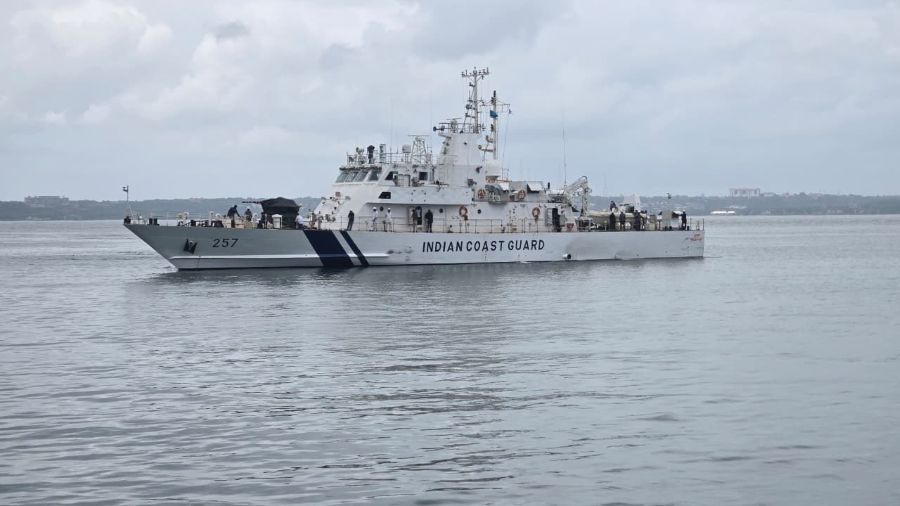
- 06 Oct 2025
In News:
The Indian Coast Guard Ship (ICGS) Akshar, the second vessel in a series of eight Adamya-class Fast Patrol Vessels (FPVs), was commissioned at Karaikal, Puducherry. Built by Goa Shipyard Limited (GSL), this indigenously designed vessel represents a major stride in India’s maritime self-reliance under the ‘Aatmanirbhar Bharat’ and ‘Make in India’ initiatives.
About ICGS Akshar
- Class and Type:Adamya-class Fast Patrol Vessel (FPV)
- Shipbuilder: Goa Shipyard Limited (GSL)
- Indigenous Content: Over 60%
- Length: 51 metres
- Displacement: Approximately 320 tonnes
- Name Significance: ‘Akshar’, meaning imperishable, signifies the Indian Coast Guard’s unwavering resolve to ensure safe, secure, and clean seas.
Key Technical and Operational Features
- Propulsion System:Equipped with two 3,000 kW diesel engines driving indigenously developed Controllable Pitch Propellers (CPP) and gearboxes, the vessel can achieve a maximum speed of 27 knots.
- Endurance:Capable of operating up to 1,500 nautical miles at an economical cruising speed, enabling extended surveillance missions.
- Weapons and Defence Systems:Armed with a 30 mm CRN 91 gun and two 12.7 mm Stabilised Remote-Controlled Guns (SRCG), integrated with an advanced Fire Control System, enhancing accuracy and combat effectiveness.
- Automation and Navigation Systems:Features an Integrated Bridge System (IBS), Integrated Platform Management System (IPMS), and Automated Power Management System (APMS) for high operational efficiency, reduced human intervention, and seamless information integration.
- Deployment:The vessel will be based at Karaikal, Puducherry, under the administrative and operational control of the Commander, Coast Guard Region (East) through District Headquarters No. 13.
Strategic Role and Functions
ICGS Akshar will be deployed for:
- Maritime surveillance and coastal security operations in India’s Exclusive Economic Zone (EEZ).
- Anti-smuggling, anti-poaching, and anti-piracy operations.
- Search and Rescue (SAR) missions, pollution control, and law enforcement duties in the maritime domain.
Its operational flexibility and advanced systems make it a multi-role platform capable of responding swiftly to emerging maritime threats and humanitarian contingencies.
India–Russia at 25
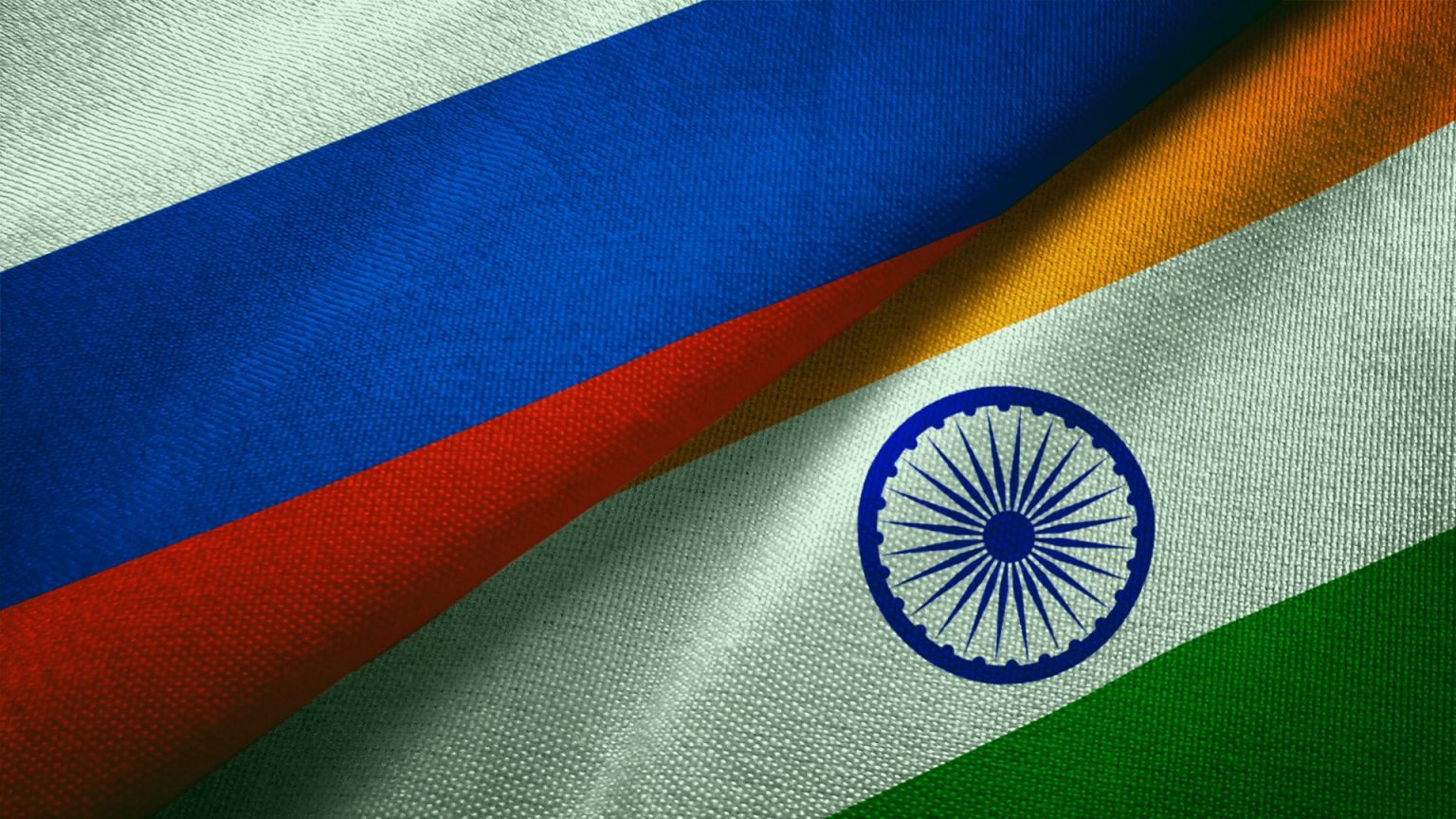
- 06 Oct 2025
In News:
- India and Russia marked 25 years of their Strategic Partnership in 2025, reaffirming their time-tested friendship and multifaceted cooperation amid a shifting global order.
- The partnership, first formalised in October 2000 through a declaration signed by President Vladimir Putin and Prime Minister Atal Bihari Vajpayee, was upgraded in 2010 to a “Special and Privileged Strategic Partnership.” This milestone underscores the enduring relevance of bilateral ties grounded in mutual trust, strategic autonomy, and converging global outlooks.
Evolution of the Partnership
- Over the last quarter-century, the India–Russia relationship has transitioned from a Cold War–era friendship to a broad-based strategic partnership encompassing defence, nuclear energy, science and technology, hydrocarbons, and space cooperation.
- Institutional mechanisms like the Intergovernmental Commission (IRIGC) and the 2+2 Dialogue framework have ensured sustained policy coordination across political, economic, and defence domains.
- At the 22nd Annual Summit held in Moscow in July 2024, both nations adopted joint statements on partnership and economic cooperation till 2030, alongside signing nine MoUs across critical sectors. Prime Minister Narendra Modi was also conferred Russia’s highest civilian honour, the Order of Saint Andrew, in recognition of his contribution to strengthening bilateral relations.
Multilateral and Global Engagement
- India and Russia continue to coordinate closely in multilateral platforms such as the United Nations (UN), G20, BRICS, and Shanghai Cooperation Organisation (SCO).
- During India’s G20 and SCO presidencies in 2023, the two nations held multiple high-level engagements, reaffirming commitment to a multipolar, rules-based international order.
- Russia has consistently supported India’s bid for a permanent seat in the UN Security Council, underscoring its trust in India’s global leadership role.
- Russia’s BRICS chairmanship in 2024 further strengthened this cooperation, with India actively participating in the Leaders’ Summit in Kazan, reflecting mutual alignment on global economic and security issues.
Economic and Trade Relations
- Economic engagement has become the new anchor of India–Russia relations. Bilateral trade reached a record USD 65.7 billion in FY 2023–24, driven by India’s rising imports of crude oil, fertilizers, and minerals, and exports of pharmaceuticals, machinery, and engineering goods.
- Both nations aim to elevate bilateral trade to USD 100 billion by 2030 and mutual investments to USD 50 billion by 2025.
- Negotiations for a Free Trade Agreement (FTA) between India and the Eurasian Economic Union (EAEU) are underway, expected to further liberalise trade flows and enhance connectivity through initiatives like the International North–South Transport Corridor (INSTC) and Arctic route cooperation.
- Emerging areas such as shipbuilding, railways, aircraft construction, and small modular nuclear reactors reflect the partnership’s adaptation to new technological and developmental priorities.
Defence and Security Cooperation
Defence remains the cornerstone of the India–Russia partnership. The collaboration has evolved from a buyer–seller relationship to joint production and technology co-development.
Key projects include:
- S-400 Triumf missile systems
- Su-30MKI and MiG-29 fighter jets
- T-90 tanks and AK-203 rifles
- INS Vikramaditya aircraft carrier
- BrahMos missile joint venture, a symbol of high-end defence collaboration
Joint military exercises such as INDRA and Vostok enhance interoperability and strategic trust. The cooperation under IRIGC–Military and Military Technical Cooperation (M&MTC) ensures continuous modernization of India’s armed forces with Russian collaboration.
Science, Technology, and Space Cooperation
- Science and technology have emerged as vital pillars of bilateral engagement. A 2021 roadmap guides collaboration in nanotechnology, quantum computing, artificial intelligence, and space exploration.
- The Kudankulam Nuclear Power Plant remains a flagship project, with plans for future units under discussion.
- New initiatives are fostering innovation and youth cooperation through institutions like the Sirius Educational Foundation and Atal Innovation Mission, encouraging joint research and startup linkages.
- Both sides are exploring joint lunar and spaceflight missions, expanding beyond traditional sectors to future-ready technologies.
People-to-People and Educational Exchanges
Beyond strategic sectors, cultural, educational, and academic exchanges have deepened mutual understanding. Student exchanges, scholarships, and Russian language learning in Indian institutions have strengthened grassroots connections. Tourism and labour mobility are emerging as new frontiers of bilateral engagement.
Outlook and Way Forward
Marking 25 years of partnership, India and Russia are renewing their cooperation to align with the demands of a multipolar and technology-driven world. The relationship is now expanding into innovation-led, climate-conscious, and connectivity-focused domains, while retaining its traditional strengths in defence and energy.
The upcoming 2025 bilateral summit in New Delhi—coinciding with the 15th anniversary of the “Special and Privileged” status—is expected to chart a roadmap for the next phase, prioritising:
- Concluding the India–EAEU Free Trade Agreement,
- Enhancing energy security and Arctic cooperation,
- Promoting defenceindigenisation, and
- Strengthening regional stability in Eurasia and the Indo-Pacific.
India’s Dairy Sector
- 06 Oct 2025
In News:
India’s dairy sector has witnessed a transformative expansion over the past decade, emerging as the world’s fastest-growing dairy producer. Milk production has surged by nearly 70% in 11 years, rising from 146 million tonnes in 2014–15 to 239 million tonnes in 2023–24, positioning India as a global dairy powerhouse.
India’s Global Dairy Leadership
- India contributes 24.76% of global milk output, maintaining its status as the world’s largest milk producer.
- The sector contributes around 5% to the national GDP and provides livelihoods to over 8 crore farmers, symbolising inclusive and sustainable rural development.
- The per capita milk availability has increased dramatically from 124 grams/day in 2014–15 to 471 grams/day in 2023–24, significantly exceeding the global average of 322 grams/day.
- Leading milk-producing states include Uttar Pradesh, Rajasthan, and Madhya Pradesh, with Haryana consistently ranking among the top three in per capita milk availability.
Institutional Backbone and Cooperative Revolution
- The National Dairy Development Board (NDDB), established in 1965, and the Operation Floodprogramme (1970) laid the foundation for India’s dairy success by replicating the Amul cooperative model across the country. These initiatives transformed India from a milk-deficient nation into the largest producer globally.
- Today, the cooperative network includes 22 milk federations, 241 district cooperative unions, 28 marketing dairies, and 25 Milk Producer Organisations (MPOs).
- Nearly 70% of the dairy workforce comprises women, with 35% actively participating in cooperatives, reinforcing the sector’s role in women’s empowerment.
- The government’s focus on strengthening cooperatives was reiterated by the Union Ministry of Cooperation, established in 2021. Union Home and Cooperation Minister Amit Shah announced that by 2029, every panchayat will have a cooperative society, fostering local economic resilience.
Modernisation and Expansion: Sabar Dairy as a Model
- The inauguration of the Sabar Dairy Plant in Rohtak, Haryana, marks a milestone in dairy modernisation. Built at a cost of ?350 crore, it is India’s largest integrated plant for curd, buttermilk, and sweets, producing 150 metric tonnes of curd, 10 metric tonnes of yogurt, 3 lakh litres of buttermilk, and 10,000 kg of sweets daily.
- The plant not only caters to the Delhi–NCR region but also benefits farmers across nine states, showcasing the potential of cooperative-led growth.
- This expansion aligns with India’s goal to increase its milk processing capacity from 66 million litres per day to 100 million litres per day by 2028–29, under White Revolution 2.0.
Government Schemes and Technological Advancements
The government has launched several initiatives to enhance dairy productivity and sustainability:
- National Gokul Mission – for conservation and genetic improvement of indigenous breeds.
- National Artificial Insemination Programme – to improve livestock productivity.
- Animal Husbandry Infrastructure Development Fund (AHIDF) – to support dairy processing and cold-chain facilities.
- National Animal Disease Control Programme (NADCP) – to ensure animal health security.
Additionally, national cooperative societies for animal feed production, organic manure, and circular economy utilisation of animal by-products have been established.
Advanced technologies such as embryo transfer and sex-sorted semen are being promoted for improved breeding efficiency. Research and development in dairy plant design and automation are being accelerated to make India self-reliant in dairy infrastructure.
NITI Aayog’s Tax Policy Working Paper
- 06 Oct 2025
In News:
In October 2025, NITI Aayog released the first paper under the NITI Tax Policy Working Paper Series–I, titled “Enhancing Tax Certainty in Permanent Establishment and Profit Attribution for Foreign Investors in India.” The paper seeks to enhance transparency, predictability, and fairness in India’s international taxation framework—key to attracting and sustaining foreign investment in the journey towards Viksit Bharat@2047.
Background and Rationale
- Foreign Direct Investment (FDI) has been a cornerstone of India’s economic growth, rising from USD 6 billion in 2005–06 to nearly USD 50 billion in 2024–25. Despite this growth, foreign investors have long faced tax-related uncertainties—particularly concerning the definitions of Permanent Establishment (PE) and Profit Attribution. Ambiguities in these areas have led to prolonged litigation (often lasting 10–12 years), raising compliance costs and discouraging potential investors.
- To address these challenges, NITI Aayog’s Consultative Group on Tax Policy (CGTP)—comprising representatives from the CBDT, DPIIT, ICAI, industry experts, and major consultancy firms—developed this working paper through extensive stakeholder consultations.
Key Concepts
- Permanent Establishment (PE): Refers to a fixed place of business (like a branch, office, or digital presence) through which a foreign enterprise conducts business in India. If a PE exists, the enterprise is liable to pay tax on its income arising in India.
- Profit Attribution: Determines the portion of a multinational’s profits that can be taxed in India, particularly when business activities are spread across jurisdictions.
Major Recommendations
- Optional Presumptive Taxation Scheme:
- Allows foreign companies to opt for a fixed tax rate on India-sourced revenue, based on industry norms.
- Aims to minimize litigation and enhance predictability.
- Legislative Clarity:
- Codification of PE definitions and profit attribution rules in line with OECD and UN models.
- Avoidance of retrospective taxation and inclusion of due process safeguards.
- Strengthened Dispute Resolution:
- Expansion of Advance Pricing Agreements (APAs) and Mutual Agreement Procedures (MAPs).
- Exploration of mandatory arbitration for unresolved international tax disputes.
- Administrative and Institutional Efficiency:
- Introduction of safe harbour rules to simplify compliance.
- Adoption of the OECD’s TRACE system to streamline withholding tax relief.
- Continuous training of tax officials in complex cross-border taxation matters.
- Stakeholder Engagement and Transparency:
- Mandatory public consultations before major tax law amendments.
- Enforcement of a Taxpayer Charter to uphold fairness and transparency.
Judicial Context
The Supreme Court has played a pivotal role in interpreting India’s international tax framework:
- Formula One Case (2017): Held that even temporary use of infrastructure (like a race track) could constitute a PE, emphasizing substance over form.
- Hyatt International Case (2025): Clarified that even global losses do not exempt Indian operations from taxation, reinforcing the “separate enterprise” principle.
Alignment with Global Tax Reforms
India’s approach aligns with the OECD–G20 Base Erosion and Profit Shifting (BEPS) initiative, especially Action 7, which curbs tax avoidance through agency arrangements.
- Pillar One: Ensures digital giants like Google or Amazon pay taxes where consumers are located, even without a physical presence.
- Pillar Two: Introduces a global minimum corporate tax rate of 15%, deterring profit shifting to tax havens.
Significance:
The working paper provides a comprehensive framework for reforming India’s cross-border tax regime—balancing investor confidence with national revenue interests. By enhancing certainty, reducing litigation, and aligning with international standards, it aims to:
- Strengthen India’s Ease of Doing Business environment.
- Attract high-quality, sustainable FDI and FPI.
- Bolster administrative efficiency and taxpayer trust.
Ultimately, these reforms are expected to create afair, transparent, and globally competitive tax system, reinforcing India’s trajectory toward a future-ready economy and the vision of Viksit Bharat@2047.
Draft Rules for Online Gaming

- 06 Oct 2025
In News:
The Ministry of Electronics and Information Technology (MeitY) has released the draft Promotion and Regulation of Online Gaming Rules, 2025, intended to operationalise the Promotion and Regulation of Online Gaming (PROG) Act, 2025. The government has also invited public feedback on the draft rules till the end of this month via email submission.
Objective
The draft rules aim to establish a comprehensive national framework for regulating the online gaming ecosystem in India. They seek to differentiate legitimate e-sports and social gaming from real money gaming (RMG) platforms, thereby ensuring user protection, transparency, and responsible innovation.
Key Provisions
1. Ban on Real Money Gaming: The Act prohibits real money gaming (RMG) — including online poker, rummy, fantasy sports, and betting — where players wager or stake money for potential returns. Only social games and e-sports, meant for recreation, education, or skill development, are permitted.
2. Establishment of the Online Gaming Authority of India (OGAI): A dedicated regulatory body, the Online Gaming Authority of India (OGAI), will be set up to oversee the sector.
- Composition: A Chairperson and five members representing different ministries.
- Powers: Quasi-judicial authority to summon individuals, examine evidence, and issue binding directions.
- Functions:
- Determine whether a game qualifies as an “online money game.”
- Register and certify online social games and e-sports.
- Impose penalties, suspend or cancel registrations for violations.
- Ensure compliance with ethical and revenue guidelines.
3. Registration Framework
- Mandatory Registration: All social and e-sports games must register with OGAI.
- Validity: Registration certificates will remain valid for up to five years.
- Disclosure Requirements: Companies must declare revenue sources and user protection measures.
- Revenue must originate from advertising, subscriptions, or access fees, not wagers or stakes.
4. Penalties and Offences
- Offering or operating an online money gaming service: up to 3 years’ imprisonment and ?1 crore fine.
- Advertising such platforms: up to 2 years’ imprisonment and ?50 lakh fine.
- Offences are non-bailable, and company officials can be held personally liable.
- Penalty quantum will depend on extent of gain, user loss, and frequency of violation.
5. Grievance Redressal Mechanism (Three-Tiered)
- Internal redressal unit of the gaming company.
- Grievance Appellate Committee (GAC) under the IT Rules, 2021.
- Online Gaming Authority of India (OGAI) as the final appellate body.
6. Role of Various Ministries
- Ministry of Electronics & IT (MeitY): Nodal authority for overall regulation.
- Ministry of Youth Affairs: Oversight of e-sports.
- Ministry of Information & Broadcasting (I&B): Regulation of social games, including issuing codes of practice and classification guidelines.
PM E-Drive Scheme
- 05 Oct 2025
In News:
- The Government of India has issued comprehensive guidelines for establishing 72,300 public electric vehicle (EV) charging stations across the country, backed by a ?2,000 crore support package under the ?10,900 crore PM E-DRIVE Scheme.
- The initiative, launched by the Ministry of Heavy Industries (MHI), is a major step toward strengthening India’s EV ecosystem, promoting sustainable transportation, and advancing the nation’s net-zero emissions goals.
About the PM E-DRIVE Scheme
The PM E-DRIVE (Electric Vehicle Development, Revolution, Innovation, Vision, and Empowerment)scheme is a flagship government initiative aimed at accelerating EV adoption through infrastructure development and fiscal incentives. The scheme aligns with India’s broader vision of Aatmanirbhar Bharat, energy security, and climate action.
- Nodal Ministry: Ministry of Heavy Industries
- Project Implementation Agency:Bharat Heavy Electricals Limited (BHEL)
- Financial Outlay: ?10,900 crore
- Support for EV Charging Infrastructure: ?2,000 crore
Objectives
- To create an accessible, reliable, and affordable public EV charging network.
- To reduce range anxiety among EV users and accelerate adoption.
- To decarbonize transport, thereby contributing to India’s net-zero by 2070 target.
- To promote domestic manufacturing of EV components and charging equipment under Make in India.
Key Features of the Guidelines
1. Subsidy Framework
The new guidelines introduce a tiered subsidy structure to ensure equitable deployment across varied locations:
- 100% Subsidy - Applicable for installations in government premises, educational institutions, residential colonies,hospitals, and public buildings, provided free public access is ensured.
- 80% Subsidy on Infrastructure + 70% on Equipment - Applicable to high-traffic areas such as railway stations, airports, bus depots, metro stations, municipal parking lots, oil PSU retail outlets, and toll plazas managed by NHAI or state agencies.
- 80% Subsidy - Extended to shopping malls, markets, highway outlets, and battery-swapping stations.
This financial assistance aims to minimize the initial investment barrier for operators and encourage private sector participation.
2. Priority Deployment Areas
The rollout prioritizes:
- Urban Centres: Cities with population above one million, state capitals, andsmart cities.
- Transit and Commercial Hubs:Airports, railway stations, bus terminals, and fuel stations.
- Transport Corridors:Highways and expressways with high vehicular density.
- Metro-linked Satellite Towns: To support inter-city EV travel and logistics operations.
3. Implementation Mechanism
- Nodal Agencies: State governments and designated agencies will aggregate demand, identify sites, and submit proposals through a dedicated online portal.
- Two-Phase Subsidy Release: Financial assistance will be provided in two tranches, linked to compliance, operational readiness, and performance metrics.
- Monitoring and Evaluation: BHEL, as the Project Implementation Agency (PIA), will oversee site selection, infrastructure rollout, and ensure timely completion in coordination with state bodies.
BSNL’s Swadeshi 4G Network Stack
- 05 Oct 2025
In News:
- In a significant step toward technological self-reliance, the Prime Minister of India launched Bharat Sanchar Nigam Limited’s (BSNL)fully indigenous 4G network stack and commissioned around 98,000 mobile towers nationwide.
- With this, India becomes the fifth country globally—after Denmark, Sweden, South Korea, and China—to design and deploy its own telecom stack, strengthening the Aatmanirbhar Bharat and Digital India missions.
About BSNL’s Swadeshi 4G Network Stack
The Swadeshi 4G network stack is India’s first fully indigenous end-to-end telecom system, integrating both hardware and software components. It is a cloud-native, software-driven, and 5G-ready architecture developed under the government’s Aatmanirbhar Bharat initiative.
Institutions Involved
- Core Network: Developed by the Centre for Development of Telematics (C-DOT).
- Radio Access Network (RAN): Designed by Tejas Networks.
- Integration & Deployment: Managed by Tata Consultancy Services (TCS).
- Implementation: Carried out by BSNL, with government support through the Digital Bharat Nidhi programme.
Key Features
- Fully Indigenous: Entirely built with Indian technology and manufacturing.
- Cloud-Native & Software-Driven: Enables seamless upgrades and efficient resource use.
- Future-Ready: Designed for smooth transition to 5G and later 6G without hardware overhauls.
- Green Infrastructure: Towers are solar-powered, making it India’s largest cluster of sustainable telecom sites.
- Applications Supported: Digital payments, e-governance, telemedicine, online education, precision farming, and more.
Implementation Highlights
- Infrastructure Rollout:
- Commissioned ~98,000 mobile towers, including 92,600 4G-enabled sites, built at a cost of approximately ?37,000 crore.
- Deployed across multiple states — Odisha, Andhra Pradesh, Uttar Pradesh, Maharashtra, Rajasthan, Assam, Gujarat, and Bihar.
- Connectivity Expansion:
- Around 29,000 villages have already been connected under the 4G Saturation Project.
- The next phase will connect 26,700 unserved villages, including 2,472 in Odisha, covering border, tribal, and left-wing extremism-affected regions.
- Expected to serve over 2 million new subscribers.
Significance
1. Strategic Autonomy & National Security: The project enhances India’s strategic independence in critical digital infrastructure by reducing reliance on foreign telecom vendors. This bolsters cybersecurity and ensures data sovereignty—a crucial factor for national security.
2. Economic Growth & Job Creation: The indigenous 4G rollout boosts domestic manufacturing, R&D investment, and employment across the telecom and electronics sectors. It supports Make in India and promotes export competitiveness in telecom technology.
3. Digital Inclusion: By connecting remote, border, and tribal areas, the project narrows the digital divide, empowering rural communities with e-governance services, online education, digital payments, and telehealth access.
4. Green and Sustainable Infrastructure: With the inclusion of solar-powered telecom sites, the initiative promotes environmentally sustainable growth, aligning with India’s Net Zero ambitions.
5. Future-Ready Ecosystem: The indigenous stack’s 5G-ready architecture provides a foundation for next-generation connectivity, supporting AI, IoT, smart agriculture, autonomous mobility, and industrial automation applications.
Two New Ramsar Sites in Bihar
- 05 Oct 2025
In News:
India has recently added two wetlands from Bihar — Gokul Jalashay (Buxar district) and Udaipur Jheel (West Champaran district) — to the List of Wetlands of International Importance under the Ramsar Convention.
With these inclusions, India now has 93 Ramsar sites, covering a total area of 13,60,719 hectares, consolidating its position as Asia’s leading country in terms of Ramsar designations and third globally, after the United Kingdom (176) and Mexico (144).
About the New Ramsar Sites
1. Gokul Jalashay (Buxar District)
- Type: Oxbow lake, situated on the southern edge of the River Ganga.
- Ecological Role: Acts as a natural flood buffer, reducing inundation risk for nearby settlements.
- Biodiversity: Supports over 50 species of resident and migratory birds and provides fish breeding grounds.
- Socio-economic Importance: Local communities depend on the lake for fishing, agriculture, and irrigation, integrating ecological sustainability with livelihoods.
- Cultural Practice: Villagers collectively clean and restore the wetland annually during a traditional festival, reflecting community-led conservation.
2. Udaipur Jheel (West Champaran District)
- Type: Oxbow lake located within the Udaipur Wildlife Sanctuary.
- Biodiversity: Hosts 280 plant species, including Alysicarpus roxburghianus, an Indian endemic.
- Avifauna: Serves as a key wintering habitat for over 35 migratory bird species, notably the vulnerable Common Pochard (Aythya ferina).
- Ecological Significance: Functions as a biodiversity hotspot and climate buffer, maintaining the hydrological balance in the region.
Understanding Oxbow Lakes
- An oxbow lake is a crescent-shaped waterbody formed when a meandering river is cut off from its main channel due to erosion and deposition processes. These lakes often evolve into rich wetland ecosystems, supporting diverse aquatic flora and fauna.
About Wetlands
- Wetlands are areas where water saturation—either permanent or seasonal—creates conditions that sustain distinctive plant and animal communities.
- They include marshes, fens, peatlands, floodplains, estuaries, and even shallow marine areas (up to 6 metres deep).
- They serve as ecological ecotones, forming transitions between terrestrial and aquatic systems and offering critical ecosystem services like flood control, groundwater recharge, carbon sequestration, and biodiversity support.
The Ramsar Convention
- Adopted: 1971 at Ramsar, Iran; came into force in 1975.
- Nature: An intergovernmental treaty under the auspices of UNESCO.
- Objective: To promote the conservation and wise use of wetlands and their resources.
- Criteria: A site must meet at least one of nine criteria, such as supporting 20,000 or more waterbirds, or hosting endangered species.
- India’s Participation: Ratified in 1982; currently one of the most active contracting parties.
Montreux Record
The Montreux Record is a register of threatened Ramsar sites where ecological character has degraded due to human interference or pollution.
- Indian sites listed:
- Keoladeo National Park (Rajasthan)– 1990
- Loktak Lake (Manipur) – 1993
- Chilika Lake (Odisha) was earlier listed in 1993 but successfully removed in 2002, becoming Asia’s first site to be delisted after restoration efforts.
Lecanemab Drug
- 05 Oct 2025
In News:
Australia has recently approved Lecanemab, a groundbreaking drug for the treatment of early-stage Alzheimer’s disease. Marketed under the brand name Leqembi, it represents a significant scientific advancement in tackling the root causes of Alzheimer’s, rather than merely alleviating its symptoms. However, concerns about its cost, accessibility, and safety continue to temper global enthusiasm.
About Lecanemab
- Lecanemab is a monoclonal antibody drug developed by the Japanese pharmaceutical company Eisai, in collaboration with Biogen.
- It belongs to a new generation of Alzheimer’s drugs designed to slow disease progression by targeting amyloid-beta proteins—abnormal clumps in the brain believed to cause neuronal damage and memory loss.
- Unlike traditional Alzheimer’s medications that address symptoms, Lecanemab acts on the underlying pathological process of the disease.
- It is administered intravenously (IV) through a drip, typically on a fortnightly basis for the initial 18 months, followed by monthly maintenance doses.
Mechanism of Action
- Lecanemab works by using lab-engineered antibodies that bind to amyloid-beta plaques in the brain. Once bound, the antibodies trigger the body’s immune system—particularly microglial cells—to clear these toxic protein deposits.
- This helps reduce amyloid build-up, thereby slowing neuronal damage and cognitive decline. Clinical imaging, such as PET scans, has shown significant reductions in amyloid levels among treated patients.
Efficacy and Clinical Evidence
The approval of Lecanemab followed a large phase 3 clinical trial involving 1,734 participants with early-stage Alzheimer’s or mild cognitive impairment.
- Over an 18-month period, patients receiving Lecanemab showed a 27% reduction in disease progression compared to those given a placebo.
- This translated to roughly five months of slower cognitive decline.
- Long-term follow-up data suggest continued benefit for up to four years of treatment.
However, the drug does not reverse existing symptoms, and its benefit is limited to the early stages of the disease.
Safety Concerns and Side Effects
Despite its promise, Lecanemab poses significant safety risks.
- About 12.6% of trial participants developed brain swelling (ARIA-E), while those carrying two copies of the ApoE4 gene—linked to higher Alzheimer’s risk—had a 32.6% incidence.
- 22% of those affected reported symptoms such as headache, dizziness, or vision problems, and a few cases of fatal brain hemorrhage were reported, particularly in patients also taking blood thinners.
- Regular MRI scans every three months are required to monitor these side effects.
Cost and Accessibility
- Lecanemab remains prohibitively expensive, costing around A$40,000 per year in Australia. It is not yet subsidised under the Pharmaceutical Benefits Scheme (PBS), and associated costs such as MRI and PET scans further limit access.
- The Pharmaceutical Benefits Advisory Committee (PBAC) has also raised concerns about whether the modest benefits justify the financial and healthcare burden.
Comparison with Similar Drugs
- Lecanemab follows Donanemab, another monoclonal antibody drug approved earlier in 2024. Both operate on similar mechanisms, with comparable efficacy and risk profiles.
- PBAC previously rejected Donanemab’s inclusion under the PBS, citing uncertain benefits relative to cost and patient safety—concerns that now shadow Lecanemab as well.
Understanding Alzheimer’s Disease
Alzheimer’s disease is a progressive neurodegenerative disorder and the most common cause of dementia, accounting for 60–80% of all cases. It damages brain areas responsible for memory, thinking, and language, leading to cognitive decline and loss of independence.
While age is the main risk factor (most cases occur after 65 years), genetic and environmental influences also play a role.
Wassenaar Arrangement
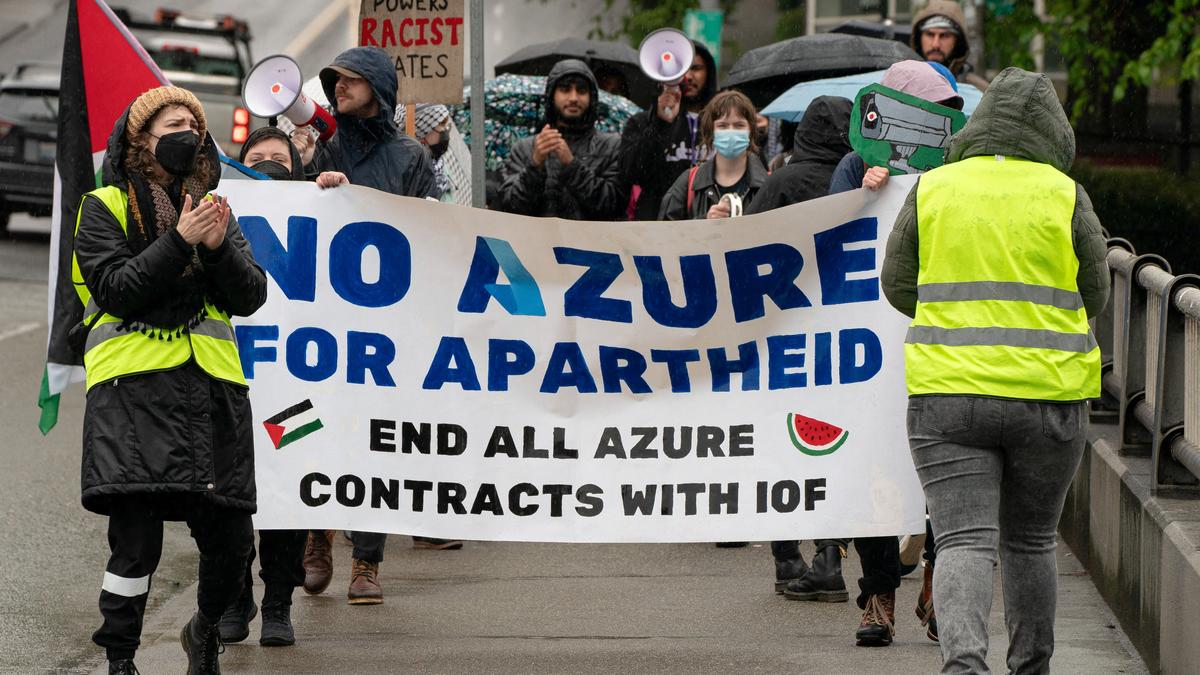
- 05 Oct 2025
In News:
- The Wassenaar Arrangement (WA), established in 1996, is a key multilateral export control regime that promotes transparency and responsibility in transfers of conventional arms and dual-use goods and technologies.
- It succeeded the Cold War-era Coordinating Committee for Multilateral Export Controls (COCOM). The name originates from Wassenaar, a suburb of The Hague (Netherlands), where the agreement was finalized in 1995.
Objectives and Structure
The primary goal of the WA is to prevent destabilizing accumulations of arms and sensitive technologies by ensuring that exports do not contribute to the development or enhancement of military capabilities that threaten international security. It seeks to achieve this through:
- Transparency and information exchange among member states on sensitive technology transfers.
- Control lists that detail conventional weapons, dual-use items, and technologies of military significance.
The Arrangement currently has 42 member countries, including major arms exporters. India became a member in 2017, enhancing its credentials as a responsible nuclear power and gaining access to advanced technologies. The Secretariat is located in Vienna, Austria.
Mechanism of Operation
- Member states voluntarily exchange information regarding exports and denials of items on the WA control lists. These include chemicals, materials, software, and production technologies that can have both civilian and military applications. Through this exchange, the Arrangement aims to ensure that exports do not reach entities or nations that could undermine global or regional security.
- India has aligned the WA’s control lists with its SCOMET (Special Chemicals, Organisms, Materials, Equipment, and Technologies) export framework, strengthening its export control system in line with international standards.
Emerging Challenges in the Digital Era
While the WA has evolved over time—such as by including controls on ‘intrusion software’—its framework largely focuses on physical exports like hardware, chips, and devices. However, modern technology increasingly operates through cloud-based services, data transfers, and software-as-a-service (SaaS) models, which do not always involve physical movement of goods.
This shift has created grey areas in export control enforcement. For example, when major tech infrastructure providers like Microsoft offer cloud computing or AI tools that could be misused for surveillance or repression, existing WA rules struggle to regulate such virtual exports. These challenges highlight the Arrangement’s limitations in addressing non-tangible, digital transfers of dual-use technologies.
The Need for Reform
To remain relevant, the Wassenaar Arrangement must modernize its control lists and definitions to address technologies such as:
- Cloud computing and virtualized infrastructure,
- Artificial intelligence and machine learning algorithms,
- Big data analytics and cybersecurity tools.
Strengthening coordination among member states to govern cross-border data flows and digital exports is crucial. The Arrangement should also explore mechanisms for real-time information sharing, capacity-building for developing members, and greater inclusivity in decision-making.
NCRB Data on Road Accidents
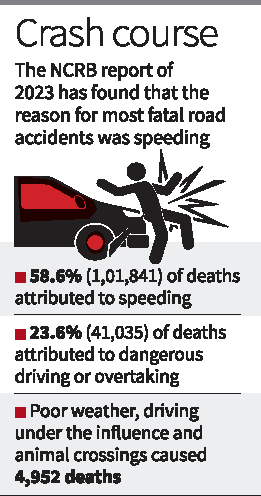
- 04 Oct 2025
In News:
According to the National Crime Records Bureau (NCRB) 2023 report, India recorded 4,64,029 road accidents, resulting in 1,73,826 deaths and 4,47,000 injuries. This marks a 1.6% rise in fatalities compared to 2022 (1,71,100 deaths) and highlights the continuing challenge of road safety in the country.
Key Trends and Statistics
- Total Accidents: 4,64,029 (17,261 more than in 2022).
- Fatalities: 1,73,826 people killed.
- Injuries: 4,47,000 people injured.
- Peak Accident Hours: 6 p.m. to 9 p.m. accounted for 20.7% of total accidents, followed by 3–6 p.m. (17.3%) and 12 noon–3 p.m. (15%).
Vehicle-Wise Analysis
Two-wheelers continued to be the most vulnerable category, responsible for nearly 46% of all road deaths.
- Two-wheelers: 79,533 deaths (45.8%)
- Pedestrians: 27,586 deaths (15.9%)
- SUVs/Cars/Jeep: 24,776 deaths (14.3%)
Tamil Nadu (11,490) and Uttar Pradesh (8,370) recorded the highest two-wheeler fatalities. Uttar Pradesh also reported the largest number of deaths due to car/SUV/jeep (19.2%) and truck/lorry (29.9%) accidents, reflecting both heavy traffic volumes and enforcement gaps.
Interestingly, while road accidents generally cause more injuries than deaths nationwide, states such as Andaman & Nicobar Islands, Jharkhand, Punjab, Bihar, and Uttar Pradesh reported higher fatalities relative to injuries.
Cause-Wise Distribution
The NCRB data highlights that speeding and careless driving remain the leading causes of fatalities:
- Speeding: 58.6% of deaths (1,01,841 fatalities)
- Dangerous or Careless Driving/Overtaking: 23.6% (41,035 fatalities)
- Other Causes: 4,952 deaths due to poor weather, intoxicated driving, or animal crossings.
Highway Fatalities
Roads designed for faster travel remain the deadliest:
- National Highways: Accounted for 34.6% of total deaths.
- State Highways: Accounted for 23.4%.
Uttar Pradesh, Tamil Nadu, Maharashtra, Karnataka, and Madhya Pradesh reported the highest fatalities on national highways.
Urban Accident Patterns
Among metropolitan areas, Delhi recorded 5,715 accidents (8.2% of total in megacities) — the highest number — followed by Bengaluru (4,980) and Chennai (3,653). Delhi also reported the highest fatalities (1,457), followed by Bengaluru (915) and Jaipur (848).
Interpretation and Policy Implications
The rising toll of road accidents underscores the multi-dimensional nature of India’s road safety crisis, rooted in over-speeding, poor enforcement, unsafe road design, and inadequate emergency response. Despite policy initiatives like the Motor Vehicles (Amendment) Act, 2019, which strengthened penalties and accountability, implementation remains uneven across states.
The dominance of two-wheeler fatalities reveals the need for:
- Stricter helmet and speed regulation enforcement,
- Improved road engineering for vulnerable users,
- Enhanced awareness campaigns, and
- Expansion of trauma care infrastructure along highways.
NCRB Data on Crime Against Children
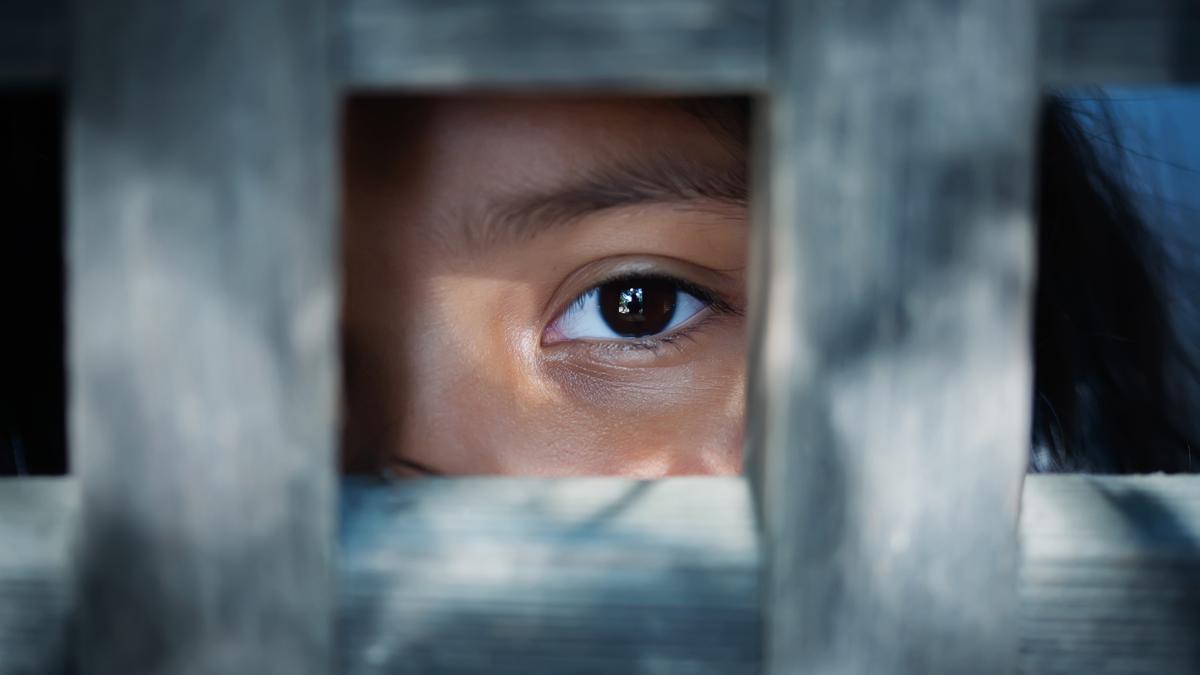
- 04 Oct 2025
In News:
According to the latest data released by the National Crime Records Bureau (NCRB), India recorded 1,77,335 cases of crimes against children in 2023, marking a 9.2% increase from 1,62,449 cases in 2022. The crime rate rose from 36.6 to 39.9 per lakh child population, reflecting both rising incidents and improved reporting mechanisms.
Major Trends and Patterns
The report reveals that kidnapping and abduction and sexual offences under the POCSO Act dominate crimes against children, together accounting for over 83% of total registered cases.
- Kidnapping and Abduction:
- 79,884 cases (45%) were registered, victimising82,106 children — a rate of 18 per lakh.
- Within this, 58,927 were general abductions, including 37,844 cases of missing children later deemed kidnapped.
- Alarmingly, 14,637 cases involved abduction of minor girls for forced marriage.
- POCSO Act Cases:
- 67,694 cases (38.2%) were filed under the Protection of Children from Sexual Offences (POCSO) Act.
- Of these, 40,434 involved penetrative sexual assault, affecting 40,846 child victims.
- In 39,076 cases, the offender was known to the victim, including 3,224 family members, 15,146 acquaintances, and 20,706 friends, online contacts, or live-in partners who exploited trust or false promises of marriage.
Victim Demographics
Among the 40,846 victims of penetrative assault:
- 762 were below 6 years,
- 3,229 were aged 6–12 years,
- 15,444 were between 12–16 years, and
- 21,411 were aged 16–18 years.
The vast majority of victims were girls, underscoring the gendered nature of sexual crimes against children.
Other Significant Offences
Beyond sexual and abduction-related crimes, the NCRB recorded:
- 1,219 murders, including 89 linked to rape or POCSO violations.
- 3,050 cases of simple hurt and 373 cases of abetment to suicide.
- 6,038 cases under the Prohibition of Child Marriage Act and 1,390 under the Child Labour (Prohibition and Regulation) Act, indicating persistent social and economic vulnerabilities affecting children.
Regional Distribution
Madhya Pradesh reported the highest number of cases (22,393), followed by Maharashtra and Uttar Pradesh.
Among smaller states and Union Territories:
- Assam recorded 10,174 cases, reflecting a sharp rise.
- Bihar followed with 9,906 cases.
- Delhi, despite its smaller population, registered 7,769 cases, among the highest rates nationally.
Law Enforcement and Justice Delivery
- Out of 2,57,756 cases investigated during the year, 1,12,290 were chargesheeted, leading to an overall chargesheeting rate of 64.3%. However, 80,198 cases remained pending at the end of 2023, highlighting systemic backlogs in investigation and prosecution.
- The chargesheeting rate varied considerably: it was higher in Tamil Nadu and Andhra Pradesh, but lower in Delhi and Haryana, reflecting uneven institutional efficiency across states.
Interpretation and Policy Significance
The steady increase in crimes against children underscores the growing vulnerabilities of minors in physical, digital, and domestic spaces. The dominance of offences by known persons reflects a disturbing breach of familial and social trust.
While better reporting and legal awareness may partly explain the rise, the data signals the urgent need for:
- Strengthening child protection systems and POCSO courts;
- Enhancing cyber surveillance to curb online grooming and exploitation;
- Expanding community-based awareness and school safety mechanisms; and
- Ensuring speedy investigation and trial to reinforce deterrence.
Interstellar Mapping and Acceleration Probe
- 04 Oct 2025
In News:
NASA has recently launched the Interstellar Mapping and Acceleration Probe (IMAP) to study how solar particles are energised and how the Sun’s protective bubble — the heliosphere — shields our solar system from harmful cosmic radiation. This mission represents a major step toward understanding the space environment critical for both scientific research and future human space exploration.
Understanding the Heliosphere
- The heliosphere is a vast bubble-like region created by the solar wind — a continuous stream of charged particles emitted by the Sun.
- It envelops the entire solar system and acts as a protective barrier against cosmic rays and interstellar particles. However, the structure, dynamics, and boundary of the heliosphere remain poorly understood.
- Understanding how solar particles are accelerated and how the heliosphere interacts with interstellar space is crucial, as variations in solar wind intensity influence space weather — which can damage satellites, affect communications, and pose health risks to astronauts.
About the IMAP Mission
- The IMAP spacecraft aims to map the boundary of the heliosphere, trace energetic particles, and enhance space weather forecasting.
- It is positioned at the first Earth–Sun Lagrange point (L1), about 1 million miles from Earth toward the Sun, enabling continuous observation of the solar wind in real time.
- IMAP will collect and transmit near real-time data to help scientists monitor solar wind disturbances and particle radiation hazards, improving preparedness for adverse space weather events.
- Its findings will also guide the planning of safer human missions beyond Earth, through improved spacecraft shielding and optimized flight paths.
Scientific Objectives
The IMAP mission will:
- Investigate how solar particles gain energy and how they are distributed throughout the heliosphere.
- Map the heliosphere’s outer boundary to understand its interaction with interstellar space.
- Enhance models of space weather, aiding the prediction of solar storms and radiation risks.
- Explore the fundamental physics governing plasma and particle behavior on both microscopic and galactic scales.
- Determine the composition of interstellar material and improve understanding of the cosmic building blocks of the universe.
Scientific Instruments
IMAP is equipped with 10 advanced instruments, each targeting specific phenomena in space.
Key instruments include:
- Energetic Neutral Atom Detectors — IMAP-Lo, IMAP-Hi, and IMAP-Ultra — which capture neutral atoms that were once charged ions and later gained electrons.
- Instruments to measure charged particles, magnetic fields, interstellar dust, and solar wind structures.
Together, these instruments will provide a comprehensive picture of particle behavior and energy flow within and beyond the heliosphere.
Significance
The IMAP mission bridges the gap between heliophysics, astrophysics, and planetary science. Its insights will:
- Advance our understanding of how the Sun’s magnetic and particle activity influences the solar system.
- Improve space weather forecasting, ensuring the safety of satellites, astronauts, and communication networks.
- Deepen scientific knowledge of how the heliosphere shields Earth and other planets from cosmic radiation.
- Support future human space missions, contributing to safer interplanetary travel.
By mapping our galactic neighborhood and decoding the physics of space particles, IMAP will transform our understanding of the Sun–Earth connection and the cosmic environment surrounding our solar system.
Red Sanders
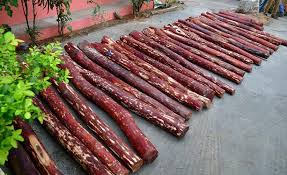
- 04 Oct 2025
In News:
- Recently, the National Biodiversity Authority (NBA) sanctioned ?82 lakh to the Andhra Pradesh Biodiversity Board for the conservation of Red Sanders (Pterocarpus santalinus), an endemic and endangered tree species of India.
- The initiative, undertaken under the Access and Benefit Sharing (ABS) mechanism of the Biological Diversity Act, 2002 (amended in 2023), marks a crucial step towards community-based biodiversity conservation.
About Red Sanders
- Red Sanders, also known as Red Sandalwood, is native to the Southern Eastern Ghats, particularly in the Anantapur, Chittoor, Kadapa, and Kurnool districts of Andhra Pradesh.
- The species thrives in rocky, red soil regions with a hot and dry climate, often in degraded or fallow lands.
- Renowned for its deep red wood, which commands high demand in international markets for musical instruments, furniture, and medicinal purposes, Red Sanders faces serious threats from illegal felling and smuggling. Due to its restricted distribution and exploitation, it is listed as:
- IUCN: Endangered
- CITES: Appendix II (regulated international trade)
- Wildlife (Protection) Act, 1972: Schedule IV
Conservation Initiative
- The ?82 lakh grant aims to raise one lakh saplings of Red Sanders, which will be distributed among farmers under the Trees Outside Forests (ToF)programme. This aligns with India’s broader goal of enhancing green cover beyond traditional forest areas.
- The funds are sourced from benefit-sharing amounts collected from users of Red Sanders, ensuring that economic benefits are returned to local stakeholders such as farmers, tribal communities, and Biodiversity Management Committees (BMCs). The initiative exemplifies how the Access and Benefit Sharing mechanism promotes equitable sharing of biological resources and converts conservation into a community-driven effort.
- In addition, the NBA has previously released ?31.55 crore to the Andhra Pradesh Forest Department for similar conservation and protection activities related to Red Sanders. The present funding will further strengthen grassroots conservation, generating local employment, fostering skill development, and enhancing community stewardship of biodiversity resources.
National Biodiversity Authority (NBA)
The National Biodiversity Authority, headquartered in Chennai, is a statutory body established under the Biological Diversity Act, 2002, and became operational in 2003. It works in coordination with:
- State Biodiversity Boards (SBBs): Regulate access to biological resources at the state level.
- Biodiversity Management Committees (BMCs): Function at the local level to document and conserve biodiversity through People’s Biodiversity Registers (PBRs).
Composition:
- Chairperson: An eminent expert in biodiversity conservation and sustainable resource use.
- 10 Ex-officio Members: Senior representatives from various ministries.
- 5 Non-official Members: Experts from relevant fields of biodiversity management.
National Crime Records Bureau

- 04 Oct 2025
In News:
The latest report from the National Crime Records Bureau (NCRB) highlights an alarming surge in crimes against Scheduled Tribes (STs) across India. As per the “Crime in India 2023” data, crimes against STs rose by 28.8%, from 10,064 cases in 2022 to 12,960 cases in 2023, reflecting deepening vulnerabilities of tribal communities in several parts of the country.
NCRB: Mandate and Role
Established in 1986, the NCRB functions under the Ministry of Home Affairs (MHA) as India’s central repository for crime and criminal data. Its creation followed recommendations from the Tandon Committee, the National Police Commission (1977–1981), and the MHA Task Force.
Headquartered in New Delhi, the Bureau is responsible for:
- Collection, analysis, and dissemination of crime data to aid law enforcement and policy formulation.
- Implementing and monitoring the Crime and Criminal Tracking Network and Systems (CCTNS) project, enabling interlinkage of police stations and online citizen services such as e-FIR and complaint filing.
- Maintaining the National Database of Sexual Offenders (NDSO) and managing the Online Cyber-Crime Reporting Portal, through which citizens can report offences like child pornography and cyber sexual violence.
- Hosting CyTrain, a digital training platform for cybercrime investigation and prosecution, and managing the Central Finger Print Bureau, India’s national fingerprint repository.
- Publishing annual statistical reports — Crime in India, Accidental Deaths & Suicides in India, and Prison Statistics India.
Key Findings: NCRB Crime Data 2023
The 2023 data reveals that Manipur witnessed the steepest spike in crimes against STs, registering 3,399 cases — a dramatic increase from just one case in 2022. The rise is closely linked to the ethnic violence between the Meitei and Kuki-Zo communities that erupted in May 2023.
Major offences reported in Manipur included 1,051 cases of arson, 260 cases of dacoity, 203 cases of humiliation or intimidation, and 193 cases of unlawful occupation or disposal of tribal land.
At the national level, the leading categories of offences against STs included:
- Simple hurt (21.3%) – 2,757 cases
- Riots (13.2%) – 1,707 cases
- Rape (9.2%) – 1,189 cases
State-wise, Madhya Pradesh (2,858 cases) and Rajasthan (2,453 cases) followed Manipur as the most affected states.
Crimes against Scheduled Castes (SCs) registered a marginal increase of 0.4% to 57,789 cases, while crimes against women rose 0.7% to 4,48,211 cases in 2023. The report highlighted that most offences against women were related to cruelty by husband or relatives (29.8%), kidnapping (19.8%), and assault to outrage modesty (18.7%).
Crimes against children surged by 9.2%, with 1,77,335 cases registered—predominantly under kidnapping (45%) and the POCSO Act (38.2%). Cases involving juveniles in conflict with law rose by 2.7%, totaling 31,365 cases.
|
Crime / Category |
2022 Count |
2023 Count |
% Change / Rate Info |
Notes |
|
Crimes against Scheduled Tribes (STs) — India total |
10,064 |
12,960 |
+28.8% |
Crime rate rose from 9.6 (2022) to 12.4 (2023) |
|
Manipur — Crimes against STs (state total) |
1 |
3,399 |
Huge increase |
2022 had 1 case; 2023 jumped to 3,399 |
|
Manipur — Dacoity (against STs) |
— |
260 |
— |
260 cases in 2023 |
|
Manipur — Arson (against STs) |
— |
1,051 |
— |
1,051 cases in 2023 |
|
Manipur — Intentional insult / intimidation (humiliation) |
— |
203 |
— |
203 cases in 2023 |
|
Manipur — Occupy / dispose of ST land |
— |
193 |
— |
193 cases in 2023 |
|
Crimes against Scheduled Castes (SCs) — India total |
57,582 |
57,789 |
+0.4% |
Slight increase year-on-year |
|
Crime against women — India total |
445,256 |
448,211 |
+0.7% |
Minor increase |
|
Crime against children — India total |
162,449 |
177,335 |
+9.2% |
Noticeable increase |
|
Juvenile cases (in conflict with law) |
30,555 |
31,365 |
+2.7% |
Cases involving juveniles |
Pallid Fish Eagle
- 03 Oct 2025
In News:
- The Corbett Tiger Reserve (CTR) in Uttarakhand, famed globally for its tigers, has recently emerged as a crucial sanctuary for raptors, with a preliminary survey confirming the presence of 30 species of birds of prey.
- Conducted jointly by the State Forest Department and the World Wide Fund for Nature (WWF), the survey has documented several rare and threatened species, including the Pallid Fish Eagle, whose nesting in the region is extremely rare.
Corbett Tiger Reserve: Overview
- Location: Foothills of the Himalayas, Uttarakhand.
- Established: Originally as Hailey National Park in 1936; first national park in India and the first to be included under Project Tiger.
- Terrain: Undulating with valleys; rivers Ramganga, Pallaen, and Sonanadi traverse the reserve.
- Vegetation: North Indian tropical moist and dry deciduous forests, with sal and mixed forests, interspersed with grasslands and riparian vegetation.
- Ecological Significance: A vital ecological corridor supporting both tiger populations and diverse avian species.
Pallid Fish Eagle (Haliaeetus leucoryphus)
- Common Names: Pallas’s Sea Eagle, Band-Tailed Fish Eagle.
- Size & Appearance: Large, brownish sea eagle.
- Habitat: Near lakes, rivers, and marshes, ranging from lowlands to 5,000 metres elevation.
- Diet: Primarily fish, but also opportunistically hunts other prey.
- Breeding: Builds large nests in tall trees, usually near water bodies.
- Distribution: East Palearctic regions — Kazakhstan, Russia, Tajikistan, Turkmenistan, Uzbekistan, Mongolia, China, India, Nepal, Bangladesh, and Myanmar.
- Conservation Status: Endangered (IUCN Red List).
- Threats: Habitat degradation, pollution, overfishing, and human disturbances.
- Significance in CTR: The discovery of a nesting site indicates active breeding, highlighting the reserve as a safe habitat for this threatened raptor.
Raptor Diversity in CTR
- Total Species Documented: 30 species of raptors, including both resident and migratory birds.
- Nesting Species: Evidence of nests from nine raptor species, including:
- Crested Serpent Eagle
- Hawk Eagle
- Red-Headed Vulture
- Indian Spotted Eagle
- White-Rumped Vulture
- Egyptian Vulture
- Indian Vulture
- Significance: The presence of nests indicates active breeding, confirming CTR as a protected and thriving habitat for raptors.
Conservation and Ecological Implications
- The discovery emphasizes CTR’s dual role as a tiger reserve and a key sanctuary for avian predators.
- Historical declines in vulture populations due to habitat disruption and veterinary drug use underscore the importance of protected habitats like CTR.
- CTR provides a superior ecological corridor, allowing threatened and migratory species to breed and sustain populations.
- Ongoing surveys aim to collect species profiles, population counts, and nesting specifics, forming the basis for targeted conservation strategies.
Swachh Shehar Jodi Initiative
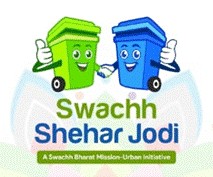
- 03 Oct 2025
In News:
- The Ministry of Housing and Urban Affairs (MoHUA) has launched the Swachh Shehar Jodi (SSJ) initiative, a structured mentorship and collaborative action program under the Swachh Bharat Mission – Urban (SBM-U).
- This initiative pairs top-performing mentor cities with low-performing mentee cities to facilitate knowledge-sharing, peer learning, and replication of best practices in sanitation and waste management.
Objectives
The primary aim of the SSJ initiative is to:
- Support low-performing cities in improving their sanitation outcomes.
- Replicate tested best practices in waste management and urban cleanliness.
- Foster peer learning, experience sharing, and collaborative urban transformation.
- Ensure no city is left behind in the spirit of Antyodaya, promoting inclusive urban development.
Structure of the Initiative
- Mentor Cities: Selected from the Super Swachh League, which comprises cities consistently ranking 1st, 2nd, or 3rd in Swachh Survekshan (SS) 2022, 2023, and 2024 across various population categories. Additional mentors include promising clean cities identified in SS 2024.
- Mentee Cities: Selected from the lowest ranks in their State’s cumulative SS rankings, with preference for geographical proximity to mentor cities.
- Scale: The initiative involves 72 mentor cities paired with around 200 mentee cities. Nearly 300 Memorandums of Understanding (MoUs) were signed simultaneously to formalize these partnerships.
Implementation Approach
- 100-Day Program: Each mentor–mentee pair develops an action plan with clear milestones, focusing on knowledge transfer and implementation of best practices.
- Capacity Building Funds: Both mentor and mentee cities can utilize funds allocated under SBM-U 2.0, supplemented by state contributions or other sources.
- Policy Support: MoHUA provides strategic guidance and monitoring to ensure effective implementation.
- Evaluation: Progress will be assessed through Swachh Survekshan 2026, measuring improvements in sanitation performance.
Significance
- Represents one of the largest time-bound mentorship frameworks in urban sanitation in India.
- Encourages citizen engagement, resilient governance, and operational excellence.
- Promotes scaling of successful urban waste management practices across diverse cities.
- Aligns with the broader vision of Swachh Bharat Mission by building capacity, capabilities, and collaborative urban governance.
Ophiorrhizaechinate
- 03 Oct 2025
In News:
In a remarkable botanical discovery, researchers have identified a new species of coffee plant, Ophiorrhizaechinata, in the biodiversity-rich shola forests of Devikulam, located in the Idukki district of Kerala. The finding underscores the ecological richness of the Western Ghats, a UNESCO World Heritage Site and one of the world’s eight “hottest hotspots” of biological diversity.
About Ophiorrhizaechinata
- Ophiorrhizaechinata is a newly discovered species belonging to the Rubiaceae family, which also includes the well-known coffee plant (Coffea species).
- The discovery was made by botanists from Sacred Heart College, Thevara, St. Teresa’s College, Ernakulam, and St. Thomas College, Thrissur, and has been published in the Nordic Journal of Botany.
- The plant grows in the ecotone region — the transitional zone between evergreen forests and grasslands — at an altitude of about 1,630 metres above sea level.
- So far, the species has been recorded only from its type locality in Devikulam, with an area of occupancy less than 4 sq. km and a population of around 35 plants, indicating its extremely limited distribution.
Biological Characteristics and Significance
- The species is closely related to Ophiorrhizamungos, commonly known as Indian Snake Root, which has long been used in traditional medicine for its anticancer and anti-venom properties.
- Given this close genetic relationship, researchers believe O. echinata may possess valuable medicinal potential, warranting further phytochemical and pharmacological studies.
- Its presence in the shola ecosystem—a habitat known for high endemism and speciation—highlights the ecological uniqueness and evolutionary importance of such forest environments.
Ecological and Conservation Importance
- The discovery reinforces the Western Ghats’ status as a centre of endemism, particularly for the Rubiaceae family, to which over ten coffee-related species are native in India.
- The limited distribution and small population make O. echinatavulnerable to habitat loss and anthropogenic pressures such as deforestation, tourism, and climate change.
- Scientists emphasize the need for urgent habitat conservation measures and in-situ protection to ensure the species’ survival, along with further research on its chemical composition and ecological interactions.
Coffee Diversity in India
- India produced approximately 3.63 lakh metric tonnes of coffee in 2024–25, mainly of Arabica and Robusta varieties.
- However, the discovery of Ophiorrhizaechinata adds to the botanical richness of native coffee-related plants found in the Western Ghats. According to the Coffee Board of India, over 100 coffee plant species are known globally, of which more than ten occur naturally in the Western Ghats region.
Preponderance of Probability
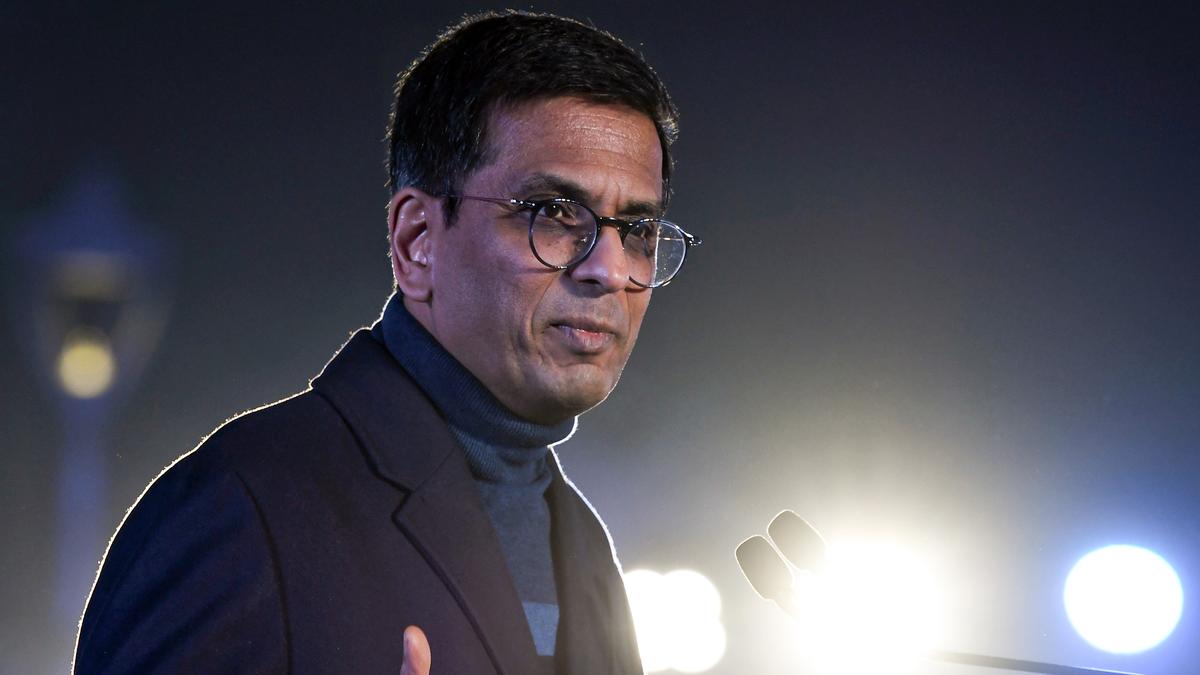
- 03 Oct 2025
In News:
- The Ayodhya title dispute judgment—a landmark decision of the Supreme Court—was founded on the principle of “preponderance of probabilities”, a key evidentiary standard in civil law. Former
- Chief Justice of India D.Y. Chandrachud (part of the 2019 constitutional bench) noted that the verdict was based not on religious sentiment or historical conjecture, but on civil law principles of possession and probability regarding ownership of the inner and outer courtyards of the disputed site.
Understanding the Principle of Preponderance of Probability
- The preponderance of probability is the standard of proof used in civil proceedings to determine whether a fact or claim is more likely to be true than false.
- It represents a balance of likelihoods, where the court weighs the evidence from both sides and accepts the version that appears more probable based on the available proof.
- Unlike the criminal law standard of “beyond a reasonable doubt”, which requires a very high degree of certainty before convicting an accused, the civil standard merely requires showing that a claim is more likely than not.
Key Features
- A fact is considered proved if the court believes it exists on the balance of probabilities, as defined under Section 3 of the Indian Evidence Act, 1872.
- The party bearing the burden of proof (typically the plaintiff) must present evidence that outweighs the opposing party’s version.
- The court does not demand absolute proof but relies on weighing evidence and drawing reasonable inferences.
This principle was elaborated in the case Narayan Ganesh Dastane v. Sucheta Narayan Dastane (1975), where the Supreme Court held that civil cases are determined based on which side’s evidence appears more credible, not necessarily conclusive.
Application in Civil Law
The preponderance of probability is the cornerstone of civil litigation, especially in matters relating to:
- Property and ownership disputes
- Contract enforcement
- Tort claims
- Family law and matrimonial matters
For instance, in a breach of contract case, a plaintiff only needs to establish that it is more likely than not that the contract was violated, rather than proving it beyond all possible doubt.
Ayodhya Judgment: Application of Civil Law Principles
In the Ayodhya title dispute case (2019), the Supreme Court applied the civil law test of possession and preponderance of probabilities to resolve competing claims over the disputed land.
The Court’s approach was rooted in legal reasoning rather than theological or emotive considerations.
Key Legal Reasoning
- The Court examined historical records, revenue documents, and testimonies to determine who had better evidence of possession of the inner and outer courtyards.
- The verdict concluded that while both Hindu and Muslim communities had worshipped at the site, the Hindus had stronger evidence of continued possession of the outer courtyard and belief in the Ram Janmabhoomi.
- The Muslim parties could not sufficiently establish exclusive possession of the inner courtyard before 1857.
- Hence, the balance of probabilities favored the Hindu claimants for ownership and management rights of the site.
Importantly, the judgment relied purely on civil law principles of possession and balance of probabilities, not on any assertion that the mosque’s construction was a desecration—a claim that does not feature in the 2019 verdict, despite later commentary.
Significance of the Principle
- Reinforces the objectivity of civil adjudication, where factual probabilities outweigh moral or religious narratives.
- Demonstrates the distinction between civil and criminal standards of proof in Indian jurisprudence.
- Ensures fairness in property disputes, where ownership is determined by evidence and not sentiment.
- Serves as a model case for the application of the Indian Evidence Act in balancing complex historical and legal claims.
PM E-DRIVE Scheme
- 03 Oct 2025
In News:
The Government of India has issued detailed operational guidelines for setting up around 72,300 public electric vehicle (EV) charging stations across the country, backed by an allocation of ?2,000 crore under the broader ?10,900 crore PM E-DRIVE Scheme. This initiative marks a major step towards achieving sustainable mobility and reducing India’s dependence on fossil fuels.
About the PM E-DRIVE Scheme
- The PM E-DRIVE (Electric Drive Revolution in Innovative Vehicle Enhancement) scheme was launched in October 2024 by the Ministry of Heavy Industries (MHI).
- It is a flagship program designed to accelerate EV adoption, strengthen charging infrastructure, and develop a robust domestic manufacturing ecosystem.
- The scheme is operational from October 1, 2024, to March 31, 2026.
Objectives
- Promote mass mobility through electrified public transport systems.
- Encourage domestic manufacturing of EVs and components under the Phased Manufacturing Programme (PMP).
- Support the creation of a comprehensive network of charging stations.
- Reduce vehicular pollution and enhance urban air quality.
- Facilitate the transition to a self-reliant (Aatmanirbhar) EV ecosystem.
Key Components of the Scheme
- Demand Incentives
- Financial support for purchasing e-2 wheelers, e-3 wheelers, e-ambulances, e-trucks, and electric buses.
- Focus on promoting electric public transport and commercial fleets.
- Grants for Capital Assets
- Funding for electric buses, public charging infrastructure, and testing facilities under MHI.
- States are encouraged to extend additional fiscal and non-fiscal incentives, such as road-tax waivers, permit exemptions, and reduced toll or parking fees.
- Administrative Support: Includes costs for Information, Education & Communication (IEC) activities and Project Management Agency (PMA) fees to ensure smooth implementation.
Implementation Framework
The scheme will be monitored by the Project Implementation and Sanctioning Committee (PISC), chaired by the Secretary, Heavy Industries.
- PISC will oversee progress, address challenges, revise incentives when necessary, and approve technical guidelines.
- Only vehicles registered under the Central Motor Vehicle Rules (CMVR) and equipped with advanced battery technology are eligible for incentives.
Bharat Heavy Electricals Limited (BHEL) serves as the Nodal Agency for:
- Demand aggregation for EV charging infrastructure.
- Development of a Unified EV Super App to provide real-time charger availability, slot booking, payments, and deployment tracking — promoting digital accessibility for users.
Guidelines for EV Charging Infrastructure (2025)
The Ministry of Heavy Industries issued a tiered subsidy framework to promote the establishment of EV charging stations nationwide.
Subsidy Structure
- 100% subsidy on upstream infrastructure and charging equipment for:Government offices, residential colonies, hospitals, and educational institutions (if open for public use).
- 80% subsidy on upstream infrastructure and 70% on equipment for:High-traffic public locations such as railway stations, airports, metro stations, bus terminals, toll plazas, and municipal parking lots.
- 80% subsidy on upstream infrastructure for:Shopping malls, markets, highways, expressways, and battery-swapping stations.
Deployment Priority
The scheme prioritizes:
- Cities with over one million population,
- State capitals, smart cities, metro-linked satellite towns, and
- High-density transport corridors.
Eligible government agencies are to designate nodal bodies to identify sites, aggregate demand, and submit proposals via a dedicated online portal.
BHEL will act as the Project Implementation Agency (PIA), with subsidies released in two tranches linked to performance and compliance milestones.
UNESCO’s World Network of Biosphere Reserves
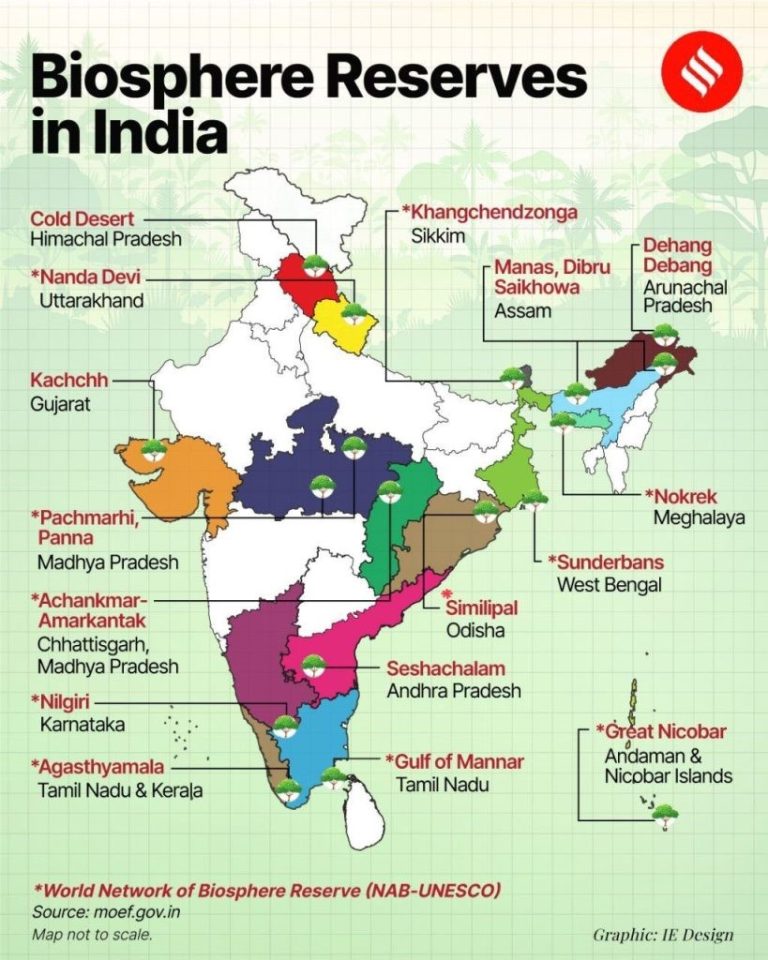
- 02 Oct 2025
In News:
UNESCO has included India’s Cold Desert Biosphere Reserve, located in Lahaul-Spiti district of Himachal Pradesh, in its World Network of Biosphere Reserves (WNBR) during the 37th ICC–MAB session (2025). This recognition makes it India’s first high-altitude cold desert biosphere reserve to join the global network, highlighting the country’s commitment to sustainable mountain ecosystem management.
About the Cold Desert Biosphere Reserve
- Established: 2009
- Location: Western Himalayas, Trans-Himalayan region of Himachal Pradesh
- Area: 7,770 sq. km
- Altitude: 3,300–6,600 m
- Constituent Areas:Pin Valley National Park, Kibber Wildlife Sanctuary, Chandratal Wetland, and adjoining regions.
- Terrain: Windswept plateaus, glacial valleys, alpine lakes, and high-altitude deserts.
- Zonation:
- Core Zone – 2,665 sq. km
- Buffer Zone – 3,977 sq. km
- Transition Zone – 1,128 sq. km
Biodiversity and Communities
- Flora: 655 herbs, 41 shrubs, and 17 tree species, including 14 endemic and 47 medicinal plants vital for the Sowa Rigpa (Amchi) traditional healing system.
- Fauna: 17 mammal and 119 bird species, including Snow Leopard, Tibetan Antelope, Himalayan Wolf, and Himalayan Ibex.
- Communities: Around 12,000 residents dependent on pastoralism, yak/goat herding, and high-altitude farming (barley and peas).
Maitri 2.0 Cross-Incubation Programme
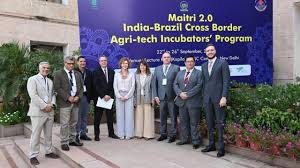
- 02 Oct 2025
In News:
The Indian Council of Agricultural Research (ICAR) recently launched the second edition of the Brazil–India Cross-Incubation Programme in Agritech (Maitri 2.0) in New Delhi. The initiative brings together innovators, startups, and research institutions from both countries to strengthen bilateral cooperation and build a more resilient and inclusive agri-food ecosystem.
About Maitri 2.0:
- Two-Way Learning Platform: Facilitates co-creation between Indian and Brazilian innovators, enabling mutual exchange of knowledge, best practices, and technology solutions.
- Objectives:
- Strengthen incubator linkages between India and Brazil.
- Promote co-incubation models and innovation-driven collaboration.
- Open opportunities in sustainable agriculture, digital technologies, and agri-value chain development.
- Foster inclusive ecosystems that directly benefit farmers and support global food security.
Strategic Significance:
Maitri 2.0 reflects the broader India–Brazil strategic partnership, aligning with their shared vision in agriculture, emerging technologies, and food and nutritional security. It builds on historical collaborations and complements global platforms such as BRICS and G20, highlighting both nations’ roles in addressing food security and climate-resilient agriculture.
Radar-Mounted Drones for Surveillance
- 02 Oct 2025
In News:
The Border Security Force (BSF), India’s first line of defence, is collaborating with the Indian Space Research Organisation (ISRO) to develop radar-mounted drones aimed at enhancing surveillance along India’s western and eastern borders. This initiative seeks to strengthen border security by providing persistent, high-accuracy monitoring of remote and difficult terrains without crossing international boundaries.
About Radar-Mounted Drones:
- Technology: Unmanned aerial systems equipped with compact radars capable of detecting moving targets, vehicles, or intruders.
- All-Weather Capability: Operates effectively in fog, darkness, rain, or adverse weather, unlike visual-only sensors.
- Real-Time Alerts: Provides immediate notifications, enabling rapid deployment of troops and timely response to border threats.
- Integrated Sensor Fusion: Potential to combine radar with infrared, high-resolution cameras, and ground sensors for enhanced detection.
- High Mobility and Scalability: Drones can be rapidly deployed in inaccessible areas, and multiple units can cover larger regions during crises.
Significance:
- The system is designed to overcome limitations of conventional border guarding, which relies on mobile soldiers or fixed towers and is effective only in limited areas.
- Radar-equipped drones can provide continuous day-and-night surveillance, monitor regions where permanent radars or outposts cannot be installed, and assist in controlling smuggling or infiltration attempts.
- The BSF, drawing experience from operations like ‘Operation Sindoor’, has also established a School of Drone Warfare at its Tekanpur Academy in Madhya Pradesh. In the coming months, the force plans to manufacture these radar-equipped drones in-house, further enhancing India’s technological edge in border security.
- This initiative exemplifies the growing role of technological interventions in modern border management, ensuring vigilance, rapid response, and comprehensive monitoring of India’s frontier regions.
Siphon-Powered Desalination
- 02 Oct 2025
In News:
- Researchers at the Indian Institute of Science (IISc), Bengaluru, have developed an innovative siphon-powered thermal desalination system that can transform seawater into potable water faster, cheaper, and more reliably than existing technologies.
- The breakthrough addresses long-standing challenges in solar desalination, such as salt buildup and limited wicking height, offering a scalable solution for water-stressed regions.
How the Siphon-Powered System Works:
- Composite Siphon: A fabric wick paired with a grooved metal surface continuously draws seawater from a reservoir.
- Gravity Flow: Ensures smooth movement and flushes away salt before crystallization occurs.
- Thin-Film Evaporation: Water spreads as a thin layer on heated metal surfaces and evaporates efficiently.
- Ultra-Narrow Air Gap: Vapor condenses just 2 mm away on a cooler surface, enhancing efficiency.
- Multistage Stacking: Multiple evaporator–condenser pairs recycle heat, maximizing water output.
Key Features and Advantages:
- High Efficiency: Produces more than 6 litres of potable water per square metre per hour under sunlight, significantly higher than conventional solar stills.
- Low-Cost Materials: Uses aluminum and fabric, making it affordable and easy to deploy.
- Energy Flexibility: Operates on solar energy or waste heat, enabling off-grid functionality.
- Durability: Can handle highly saline water (up to 20% salt) without clogging.
- Scalability: Suitable for villages, coastal areas, disaster zones, and island nations.
Significance:
- Water Security: Provides a sustainable solution for drinking water scarcity in remote and off-grid regions.
- Innovation Leap: Overcomes technical limits of traditional solar stills, particularly salt scaling and wicking height.
- Sustainable Development: Eco-friendly, low-cost, and aligned with SDG 6 (Clean Water and Sanitation).
Supported by India’s Department of Science and Technology (DST) and published in Desalination, this technology could make the ocean a reliable source of fresh water for millions, emphasizing simplicity, salt resistance, and scalability as its core strengths.
Special and Differential Treatment (SDT)
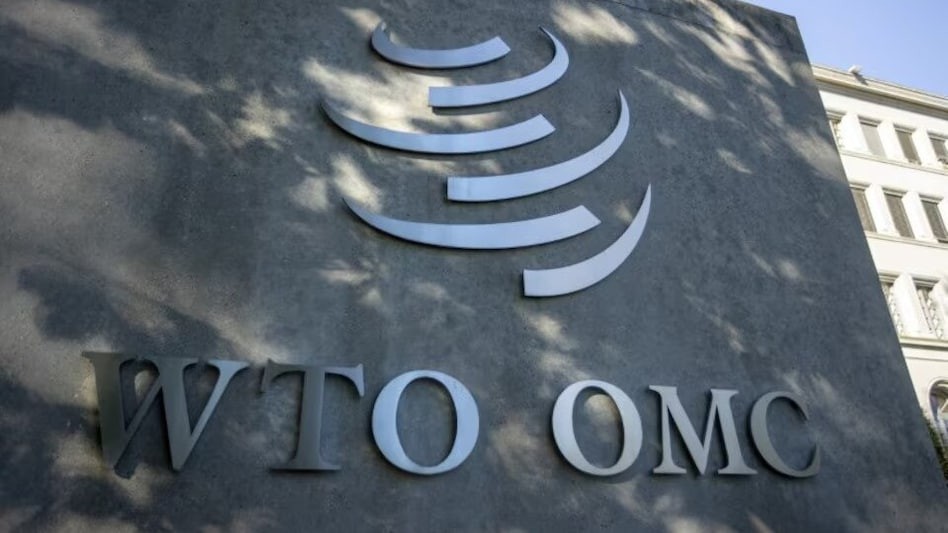
- 02 Oct 2025
In News:
China has announced that it will continue to be classified as a developing country within the World Trade Organization (WTO) but will no longer seek Special and Differential Treatment (S&DT) in future negotiations.
About Special and Differential Treatment (S&DT):
- S&DT grants developing and least-developed countries (LDCs) flexibilities in implementing WTO obligations, including longer deadlines, preferential market access, safeguard measures, and technical assistance.
- Introduced under GATT in the 1960s and formalized in WTO agreements (1995) and the Doha Development Agenda (2001).
- LDCs receive additional automatic benefits; other countries self-declare their status, subject to challenge by WTO members.
Significance of China’s Decision:
- China, historically a major beneficiary of S&DT, will forego such benefits while retaining its developing country status.
- The move signals support for multilateral trade and contributes to WTO reform, addressing concerns raised by the United States and others over selective access to S&DT.
- It highlights the tension between economic capabilities and self-declared developing status, especially among major economies.
Implications:
- Encourages balanced WTO negotiations and strengthens the global trading system.
- Marks a step towards aligning development considerations with global economic realities without relinquishing China’s role in the Global South.
AstroSat
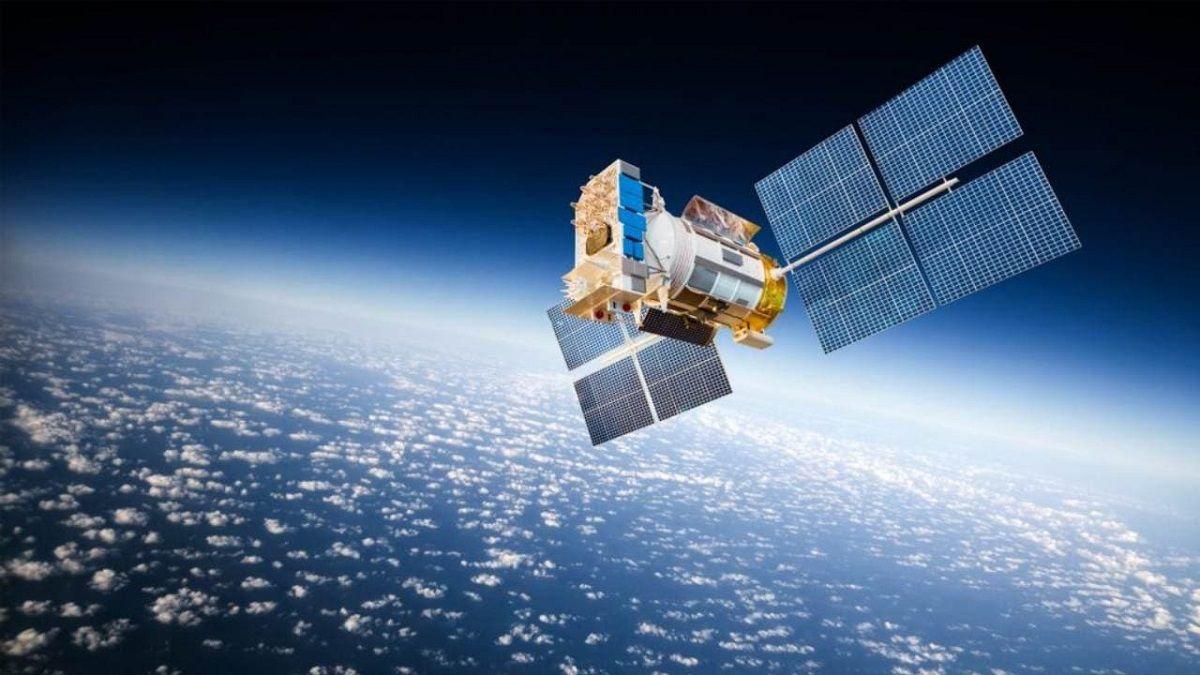
- 01 Oct 2025
In News:
India’s first dedicated Space Astronomy Observatory — AstroSat — has successfully completed a decade of operations since its launch on September 28, 2015. Designed for a mission life of five years, AstroSatcontinues to deliver valuable scientific data, marking a major milestone in India’s advancement in space-based astrophysics research.
About AstroSat
- Launched by: Indian Space Research Organisation (ISRO)
- Launch Vehicle: PSLV-C30 (XL)
- Launch Site: Satish Dhawan Space Centre (SDSC), Sriharikota
- Launch Date: September 28, 2015
- Mission Life: Originally 5 years, extended due to sustained functionality and scientific output
- Managed by:Mission Operations Complex (MOX) of ISTRAC, Bengaluru
AstroSat represents India’s first multi-wavelength space observatory, capable of observing celestial bodies in Visible, Ultraviolet (UV), and low and high-energy X-ray bands of the electromagnetic spectrum simultaneously — a capability possessed by only a handful of space observatories globally.
Scientific Objectives
AstroSat was conceived to advance India’s capability in space-based astronomy and to deepen understanding of high-energy astrophysical phenomena. Its key scientific goals include:
- Investigating high-energy processes in binary star systems containing neutron stars and black holes.
- Estimating magnetic field strengths of neutron stars.
- Studying star formation regions and energetic star systems beyond the Milky Way.
- Detecting and monitoring transient X-ray sources (brief, bright cosmic events).
- Conducting a limited deep-field survey of the universe in the ultraviolet region.
Key Instruments (Payloads)
AstroSat carries five scientific payloads, each contributing to multi-spectral observations:
- Ultra Violet Imaging Telescope (UVIT):Observes celestial objects in near and far ultraviolet as well as visible wavelengths, helping in the study of star formation and evolution.
- Large Area X-ray Proportional Counter (LAXPC):Detects time variability and spectral properties of X-ray sources in the 3–80 keV range.
- Cadmium–Zinc–Telluride Imager (CZTI):Observes hard X-rays (above 20 keV) and helps study gamma-ray bursts and black hole emissions.
- Soft X-ray Telescope (SXT):Provides soft X-ray imaging and spectroscopy to study compact objects like neutron stars and white dwarfs.
- Scanning Sky Monitor (SSM):Continuously scans the sky to detect new transient X-ray sources and track their variability.
Study In India (SII) Portal
- 01 Oct 2025
In News:
The University Grants Commission (UGC) has mandated that all foreign nationals studying in Indian Higher Education Institutions (HEIs) must now register on the newly launched Study in India (SII) portal. The move seeks to centralise data, streamline admission and visa processes, and strengthen compliance monitoring for international students studying in India.
Background and Context
Until now, foreign students seeking admission in Indian universities had to apply directly to individual institutions, which also facilitated their visa processes. However, the absence of a centralised database made it difficult for authorities to track foreign student numbers, monitor visa compliance, and address instances of overstaying or misuse of study visas.
To overcome these challenges, the Ministry of Education (MoE), in collaboration with the UGC, has introduced the Study in India portal as a digital one-stop platform integrating admissions, visa processing, and compliance tracking.
About the Study in India (SII) Portal
- Nodal Ministry: Ministry of Education (MoE), Government of India
- Implementing Agency: University Grants Commission (UGC)
- Objective: To promote India as a global education hub and simplify access for international students seeking to study in Indian higher education institutions.
Key Features
- Single-Window Digital Platform:
- Acts as a unified interface for application submission, admission processing, and student visa facilitation.
- Enables foreign students to explore regular, short-term, and long-term courses across Indian universities and HEIs.
- Comprehensive Academic Directory:
- Lists undergraduate, postgraduate, and doctoral programmes available in participating institutions.
- Includes courses from the Indian Knowledge System (IKS) — such as Yoga, Ayurveda, classical music, and traditional arts — highlighting India’s cultural and intellectual heritage.
- Unique SII-ID Generation:
- Upon registration, each student receives a unique SII-ID, which must be quoted while applying for the student visa.
- The visa process is now directly linked to the SII portal, ensuring authenticity and easier tracking.
- Institutional Accountability:
- HEIs admitting foreign students must appoint a Compliance Officer to oversee adherence to all SII guidelines and data-reporting requirements.
- Institutions are required to update foreign student details regularly on the portal for regulatory oversight.
- Information Gateway:Provides details about academic facilities, research opportunities, campus infrastructure, and student support services to guide prospective applicants.
Agri-Stack Scheme
- 01 Oct 2025
In News:
- The Government of Uttar Pradesh has issued a stern directive to all District Magistrates (DMs), warning of strict action against officials who fail to complete farmer registration under the Agri-Stack scheme within the revised deadline.
- Beginning October 16, 2025, DMs have been allotted one month to ensure 100% registration of farmers, a crucial step in the implementation of this national digital agriculture initiative.
About the Agri-Stack Scheme
- The Agri-Stack is a national digital infrastructure being developed by the Ministry of Agriculture and Farmers Welfare, in collaboration with state governments, to digitally transform Indian agriculture.
- It aims to create a unified database of farmers and farmlands, integrating information on land records, crop patterns, and scheme benefits.
- The system is envisioned to serve as a foundational digital layer for data-driven governance, policy formulation, and targeted service delivery to farmers.
Objectives and Key Features
- Empowerment through Data: Enables the creation of a unique digital identity for every farmer through a Farmer ID linked to Aadhaar, ensuring accurate targeting of benefits.
- Efficiency and Transparency: Digitally connects demographic data, landholdings, and scheme eligibility, minimizing leakages and duplication.
- Customized Services: Facilitates localized advisories, early warning systems for disasters and pest attacks, and timely delivery of inputs and credit.
- Ease of Governance: Provides a single, verified data source for policy planning, monitoring, and feedback management.
- Public–Private Collaboration: Enables authorized access for banks, agri-tech startups, and value-chain companies to offer tailored financial and technical services.
Core Components of the Agri-Stack
- Farmer and Farmland Registries:
- A federated digital registry of all farmers across India, compiled by states and harmonized at the central level.
- Each farmer receives a unique, verifiable Farmer ID, dynamically linked to farmland plot data for non-legal, advisory, and planning purposes.
- Unified Farmer Service Interface (UFSI):
- A technical framework that ensures data interoperability between government and authorized private stakeholders.
- Enables federated data exchange with consent-based access, improving coordination across sectors like finance, insurance, and agri-input supply.
- Crop Sown Registry:
- Digitally records seasonal crop data for every farm using smartphone, drone, and satellite imagery.
- Replaces traditional manual crop surveys with real-time, geo-referenced data for better yield estimation and policy response.
- Agri-Stack Sandbox:A testing environment that allows authorized users (such as agri-tech firms and banks) to safely experiment with sample datasets and digital tools before gaining production-level access.
- Consent Manager:
- Empowers farmers to control the sharing of their personal data.
- Data access is granted only with explicit consent, which can be revoked at any time, ensuring privacy and accountability.
Lachipora Wildlife Sanctuary
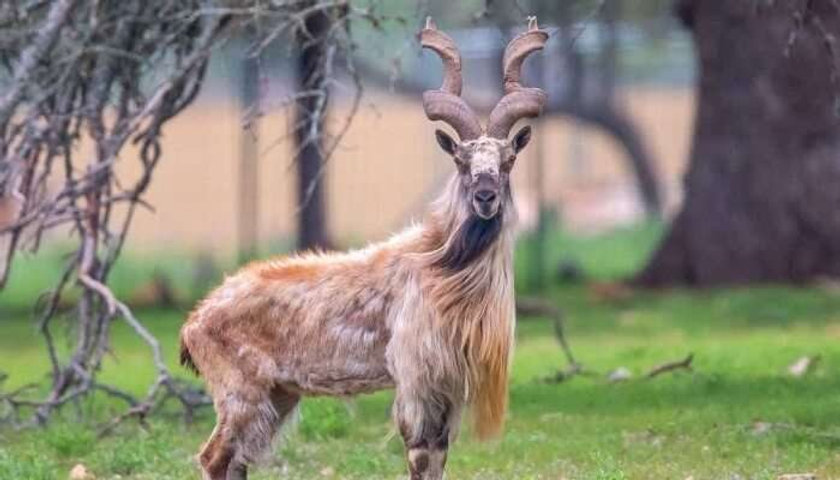
- 01 Oct 2025
In News:
The District Magistrate of Baramulla has ordered the immediate closure of 14 gypsum mining units operating within the prohibited 1-km radius of the Lachipora Wildlife Sanctuary in north Kashmir’s Uri subdivision, following directives from the Supreme Court of India.
Background and Legal Context
- The decision is based on the Supreme Court judgment in State of Uttarakhand & Others vs. Nandan Singh Bora & Others, which mandates that no mining or quarrying activity is permissible within 1 km of any protected forest or wildlife sanctuary.
- Furthermore, if the Eco-Sensitive Zone (ESZ) of a sanctuary extends beyond 1 km, the restriction applies to the entire notified ESZ area.
- Subsequent surveys conducted by the Wildlife Warden, North Kashmir Division (Sopore), confirmed that several gypsum mining units were functioning within the restricted buffer zone of Lachipora. Acting on this report, the district authorities ordered the immediate suspension of all mining operations to prevent further ecological degradation.
- Officials emphasized that the move aims to preserve the fragile ecology of the region, which forms a vital part of the North Kashmir forest belt and supports diverse wildlife species. The crackdown also aligns with the Geology and Mining Department’s intensified efforts to curb illegal quarrying across Baramulla district.
About Lachipora Wildlife Sanctuary
- Location: Situated in Baramulla district, Jammu & Kashmir, near the village of Lachipora, on the northern banks of the Jhelum River.
- Established: 1987
- Area: 141 sq. km
- Altitude Range: 1,630–3,300 metres
- Topography: Comprises a varied landscape of alpine meadows, gentle to steep slopes, and rocky cliffs, supporting rich biodiversity.
Ecological Significance
- Flora:The sanctuary hosts extensive coniferous forests of deodar, Himalayan white pine, and blue pine, along with broadleaf species such as birch, horse chestnut, West Himalayan fir, and Persian walnut.
- Fauna:
- Habitat for endangered species like the Hangul (Kashmir stag) and Markhor, a wild goat known for its spiral horns.
- Home to Himalayan black bear, snow leopard, musk deer, and several small mammals.
- Recognized as an Important Bird Area (IBA) for harboring the vulnerable Western Tragopan and other high-altitude avifauna.
Jal Prahar 2025
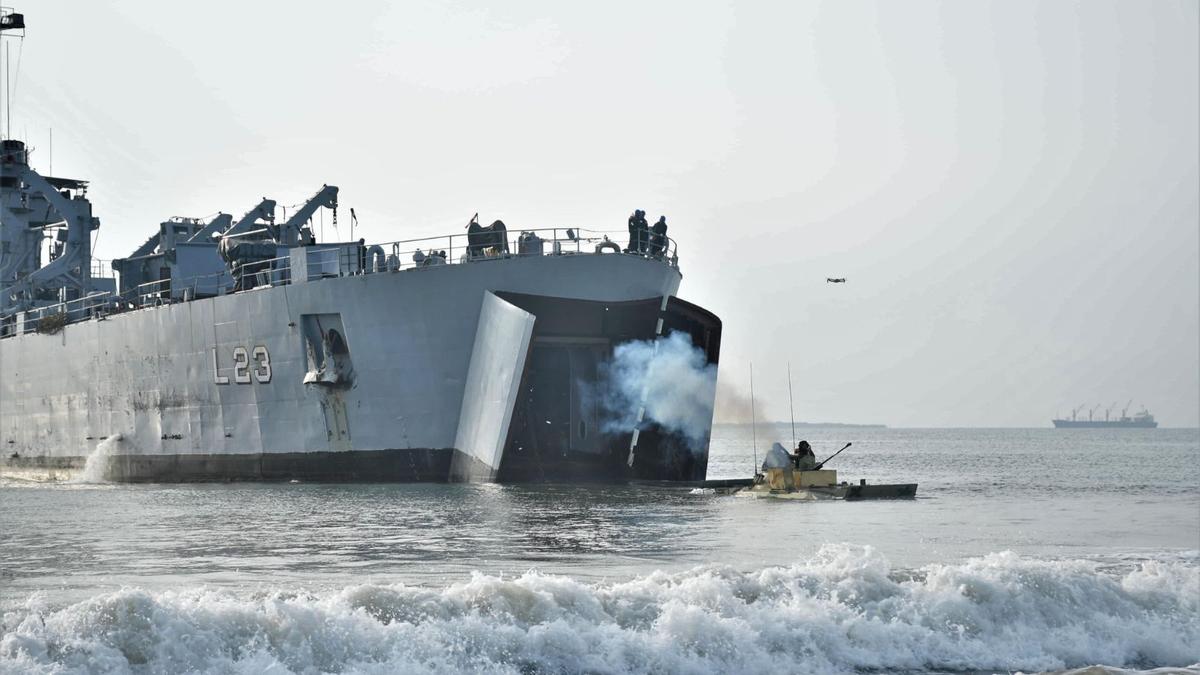
- 01 Oct 2025
In News:
The Indian Navy has successfully concluded the biannual joint amphibious exercise ‘Jal Prahar 2025’ along the eastern seaboard, in close coordination with the Indian Army. The exercise aimed to enhance joint operational readiness, inter-service synergy, and maritime security preparedness.
About Jal Prahar 2025
- Nature of Exercise:‘Jal Prahar’ is a biannual joint amphibious exercise conducted by the Indian Navy in collaboration with the Indian Army.
- Objective:To strengthen coordination, interoperability, and integration between the two forces for effective amphibious operations and coastal defence.
Exercise Structure and Key Highlights
The 2025 edition of the exercise was conducted in two phases:
- Harbour Phase (Visakhapatnam):
- Focused on the induction and integration of Army troops onboard naval platforms such as INS Gharial.
- Included onboard training sessions, safety briefings, familiarization with naval operations, and interaction activities to foster inter-service camaraderie.
- Sea Phase (Kakinada):
- Involved the execution of full-scale amphibious operations, including hard beaching, launching of Landing Craft Assaults (LCAs) and infantry combat vehicles (BMPs).
- Validated Standard Operating Procedures (SOPs) and Joint Training Protocols, ensuring seamless coordination during real-world operations.
UNEP Young Champions of the Earth Award 2025
- 30 Sep 2025
In News:
The United Nations Environment Programme (UNEP) has announced the winners of the 2025 Young Champions of the Earth Award, recognising three outstanding entrepreneurs from India, Kenya, and the United States for their innovative solutions addressing pressing environmental challenges.
About the Award
- Launched: 2017
- Relaunched: 2025, in partnership with Planet A, an environmental awareness initiative co-founded by U.S. cleantech executive Chris Kemper.
- Organised by:United Nations Environment Programme (UNEP)
- Objective: To empower and celebrate young innovators (below 30 years of age) offering scalable solutions to the triple planetary crisis — climate change, biodiversity loss, and pollution & waste.
Each winner receives USD 20,000 in seed funding, mentorship, and access to a global platform to expand their innovations. They also participate in the Planet A Pitch Competition, with opportunities to win an additional USD 100,000 growth grant and a potential USD 1 million seed investment.
2025 Award Winners
- JinaliMody (India) – Founder, Banofi Leather
- Innovation: Produces sustainable, leather-like material from banana crop waste.
- Impact: Reduces water consumption, chemical pollution, and carbon emissions associated with traditional leather production.
- Significance: A women-led initiative tackling the fast fashion industry’s environmental footprint while promoting circular economy principles.
- Joseph Nguthiru (Kenya) – Founder, HyaPak
- Innovation: Converts the invasive water hyacinth from Lake Naivasha into biodegradable packaging and seedling wrappers.
- Impact: Provides a sustainable alternative to single-use plastics while addressing invasive species management.
- Noemi Florea (United States) – Founder, Cycleau
- Innovation: Developed a compact greywater reuse system that can retrofit household sinks, showers, and laundry units.
- Impact: Converts wastewater into potable water using low energy, offering a scalable model for water conservation and reuse.
Significance
- The award exemplifies youth-driven environmental innovation, aligning with UNEP’s broader mission to foster sustainable solutions.
- It highlights global South participation, with India and Kenya demonstrating leadership in low-cost, eco-friendly technologies.
- The 2025 relaunch underscores growing private sector and media collaboration in advancing environmental entrepreneurship through platforms like Planet A.
India test-fires Agni-Prime missile from rail-based mobile launcher
- 30 Sep 2025
In News:
India has successfully test-fired the Agni-Prime (Agni-P) intermediate-range ballistic missile from a rail-based mobile launcher, marking a first-of-its-kind achievement in the nation’s defence history. The test was conducted from a platform integrated with the national railway network. This milestone represents a significant leap in India’s strategic mobility and deterrence capabilities.
About Agni-Prime Missile
- Type: Next-generation, nuclear-capable, intermediate-range ballistic missile (IRBM)
- Range: Up to 2,000 kilometres
- Developed by:Defence Research and Development Organisation (DRDO) in collaboration with the Strategic Forces Command (SFC)
- Part of: India’s Agni missile series, designed to reinforce the country’s credible minimum deterrence posture.
The Agni-Prime is equipped with advanced guidance and communication systems, featuring a canisterised launch mechanism that enhances storage safety, rapid deployment, and longer shelf life.
Rail-Based Mobile Launcher: A Game-Changing Innovation
The recent test marked the first time India used a rail-based canisterised mobile launcher.
- It can move seamlessly across the national rail network, allowing flexible positioning and quick deployment.
- The launcher enables a short reaction time with low visibility, enhancing operational stealth and survivability.
- This mobility reduces predictability of launch locations, complicating adversarial surveillance and targeting efforts.
Strategic Significance
- Enhanced Strategic Deterrence:The test demonstrates India’s ability to deliver a credible and survivable nuclear deterrent, joining the select group of nations with rail-based canisterised launch systems.
- Improved Survivability and Flexibility:Rail mobility adds a new dimension to India’s nuclear command structure by complementing road-based and silo-based systems, ensuring launch readiness even under high-threat scenarios.
- Operational Stealth and Rapid Response:The ability to launch within minutes from concealed rail positions strengthens India’s second-strike capability under its nuclear doctrine.
- Geopolitical Implications:The development aligns with India’s effort to maintain strategic stability in a complex regional environment, particularly amid evolving threats in South Asia and the Indo-Pacific.
Recent Developments in India’s Missile Programme
- In August 2025, Agni-Prime was successfully tested from Chandipur, Odisha.
- Earlier, in March 2024, under Mission Divyastra, India tested Agni-5 with MIRV (Multiple Independently Targetable Re-entry Vehicle) capability — allowing a single missile to carry and deliver multiple nuclear warheads to different targets.
- The Strategic Forces Command, operational since 2003, currently manages India’s nuclear arsenal and deployment systems.
India’s 4-Pillar Approach to Strengthen Shipbuilding, Maritime Financing, and Domestic Capacity
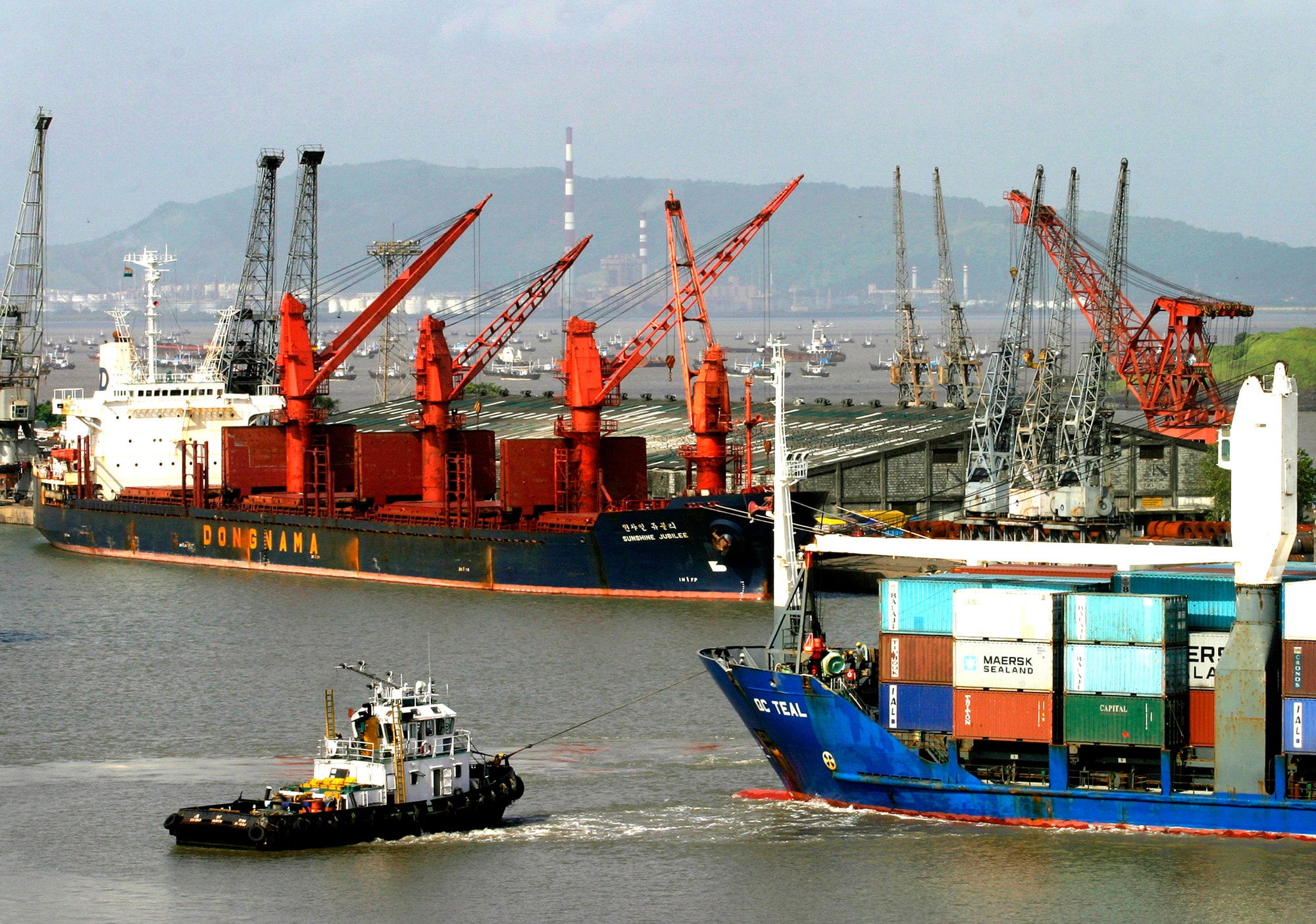
- 30 Sep 2025
In News:
In a major push to revive India’s maritime and shipbuilding sector, the Union Cabinet approved a ?69,725 crore package (September 2025) anchored on a comprehensive 4-Pillar Approach. The initiative aims to transform India into a global hub for shipbuilding and shipping services, enhance maritime self-reliance, and contribute to the vision of Aatmanirbhar Bharat.
Background
India’s maritime sector supports 95% of the nation’s trade by volume and 70% by value, making it a critical pillar of economic and strategic security. Recognized as the “mother of heavy engineering industries,” shipbuilding plays a pivotal role in employment generation, technological innovation, and defence capability. The new package seeks to address long-standing gaps in financing, infrastructure, and capacity to strengthen domestic shipyards and maritime logistics.
Objectives
- Expand domestic shipbuilding capacity to 4.5 million Gross Tonnage (GT) by 2036.
- Generate nearly 30 lakh employment opportunities.
- Mobilize ?4.5 lakh crore in investments.
- Build resilient maritime supply chains ensuring national, energy, and food security.
- Advance India’s position as a competitive and sustainable maritime economy.
The Four Pillars of the Package
1. Shipbuilding Financial Assistance Scheme (SBFAS)
- Extended till: 31 March 2036
- Corpus: ?24,736 crore
- Purpose: Incentivize shipbuilding within India by providing financial support to Indian shipyards.
- Key Feature: Introduction of a Shipbreaking Credit Note worth ?4,001 crore to encourage sustainable ship recycling and capacity utilization.
2. Maritime Development Fund (MDF)
- Corpus: ?25,000 crore
- Components:
- Maritime Investment Fund: ?20,000 crore, with 49% Government of India participation.
- Interest Incentivization Fund: ?5,000 crore to reduce the cost of borrowing and improve project bankability.
- Objective: Provide long-term financing for shipbuilding, port infrastructure, and related logistics services.
3. Shipbuilding Development Scheme (SbDS)
- Outlay: ?19,989 crore
- Aim: Expand India’s domestic shipbuilding capacity and support mega shipbuilding clusters.
- Key Features:
- Establishment of the India Ship Technology Centre under the Indian Maritime University (IMU).
- Support for greenfield and brownfield shipyards.
- Insurance and risk coverage for shipbuilding projects.
- Focus on skill development and adoption of advanced shipbuilding technologies.
4. National Shipbuilding Mission and Reforms
- A National Shipbuilding Mission will coordinate implementation and monitor outcomes of all initiatives under the package.
- Focus areas include:
- Taxation, legal, and policy reforms to streamline procedures.
- Capacity enhancement through modern shipyard development.
- Human resource and skill training to strengthen India’s maritime workforce.
- Promotion of green and sustainable shipbuilding practices aligned with global standards.
Expected Impact
- Unlock 4.5 million GT of annual shipbuilding capacity.
- Create nearly 30 lakh direct and indirect jobs across the maritime ecosystem.
- Boost investment inflows of ?4.5 lakh crore into ports, shipyards, and allied industries.
- Enhance strategic autonomy and reduce dependence on foreign shipbuilders.
- Strengthen geopolitical resilience, ensuring continuity of India’s trade, energy, and food supply chains during global disruptions.
- Foster innovation, sustainability, and competitiveness in line with “Make in India” and “Blue Economy” objectives.
SPARSH Pension System
- 30 Sep 2025
In News:
The System for Pension Administration – Raksha (SPARSH), an initiative of the Ministry of Defence (MoD), has emerged as a landmark reform in defence pension management. Recently, SPARSH resolved 87% of legacy discrepancies—addressing 5.60 lakh out of 6.43 lakh cases—and has significantly improved grievance redressal efficiency.
About SPARSH Pension System
- Launched by: Ministry of Defence
- Administered by:Defence Accounts Department (DAD) through the Principal Controller of Defence Accounts (Pensions), Prayagraj
- Coverage: Caters to pensioners from the Army, Navy, Air Force, and Defence Civilians
- Scope: Over 31.54 lakh defence pensioners across India and Nepal are onboarded on SPARSH, making it the world’s largest digital pension management system.
Objectives
- To provide a comprehensive, transparent, and paperless system for pension sanction, disbursement, and grievance redressal.
- To ensure direct pension disbursement to beneficiaries without intermediaries.
- To modernize defence pension administration by shifting from a fragmented and manual process to a centralized and integrated digital framework.
Key Features
- Centralized and Web-Based Platform:Handles pension sanction, claim, and disbursement directly into the pensioners’ bank accounts, eliminating third-party intermediaries.
- Self-Service Portal:Enables self-verification, easy data correction, and real-time access to pension details through a personal dashboard.
- Digital Life Certification:Pensioners can complete identification digitally, removing the need for physical visits to pension offices.
- Comprehensive Record Management:Maintains the entire pension lifecycle—from initiation to cessation and transfer to the last eligible beneficiary.
- Grievance Management:Provides an integrated mechanism for service requests and grievance redressal within the same platform.
Significance
SPARSH represents a paradigm shift in defence pension administration—from manual and fragmented systems to a transparent, technology-driven model. It embodies the government’s commitment to “Minimum Government, Maximum Governance”, ensuring efficiency, accountability, and dignity for millions of defence pensioners.
By integrating real-time disbursal, grievance monitoring, and self-service accessibility, SPARSH has strengthened financial inclusion, digital governance, and welfare delivery within India’s defence ecosystem.
L-1 Visa

- 30 Sep 2025
In News:
The U.S. administration’s decision to impose a steep $100,000 fee on new H-1B visa applications has reignited debate over whether the L-1 visa could serve as a practical alternative for Indian professionals. While both facilitate skilled migration, they serve distinct purposes and cater to different categories of workers.
About the L-1 Visa
- Nature and Purpose:
- The L-1 visa is a non-immigrant work visa designed for intra-company transfers within multinational corporations.
- It enables global firms to relocate executives, managers, and employees with specialized knowledge from their overseas branches to U.S. offices.
- Introduced under the Immigration and Nationality Act (1965), it aims to promote international business operations and internal talent mobility without depending on the external labour market.
- Categories:
- L-1A: For executives and managers; maximum stay of 7 years.
- L-1B: For employees with specialized knowledge; maximum stay of 5 years.
Applicants must have worked at least one continuous year abroad for the same company within the preceding three years.
Key Features and Advantages
- No Cap or Lottery: Unlike the H-1B, the L-1 has no annual quota or lottery system, allowing year-round applications.
- Blanket Petitions: Large multinationals can file blanket petitions for quicker processing.
- Dual Intent: L-1 holders can apply for a green card without jeopardizing their visa status.
- Dependent Work Rights: Spouses on L-2 visas can work freely in the U.S., offering significant flexibility for families.
- Corporate Convenience: Firms can manage global mobility efficiently, especially for leadership or niche technical roles.
Limitations and Challenges
- Narrow Eligibility: Only employees of the same multinational company are eligible. The visa cannot be used to switch to another employer in the U.S.
- High Scrutiny: U.S. consulates, especially in India, closely scrutinize “specialized knowledge” claims, leading to higher rejection rates than H-1B visas.
- Time-Bound Stay: L-1 visas have strict duration limits and cannot be extended while awaiting permanent residency.
- No Portability: The visa binds the employee to the sponsoring company, unlike H-1B holders who can change employers under certain conditions.
L-1 vs H-1B: The Key Differences
|
Aspect |
L-1 Visa |
H-1B Visa |
|
Purpose |
Intra-company transfer |
Employment in speciality occupation |
|
Eligibility |
Must have worked abroad for the same company |
Bachelor’s degree in speciality field |
|
Annual Cap |
No cap |
85,000 new visas per year |
|
Employer Flexibility |
Cannot switch companies |
Can change employers (with transfer approval) |
|
Wage Requirement |
No prevailing wage rule |
Must meet U.S. Department of Labor’s wage standards |
|
Processing System |
No lottery |
Lottery-based selection |
|
Dependent Work Rights |
L-2 spouse can work freely |
H-4 spouse requires separate authorization |
|
Maximum Stay |
5–7 years (non-extendable beyond limits) |
6 years (extendable in green card process) |
Global Forest Fund
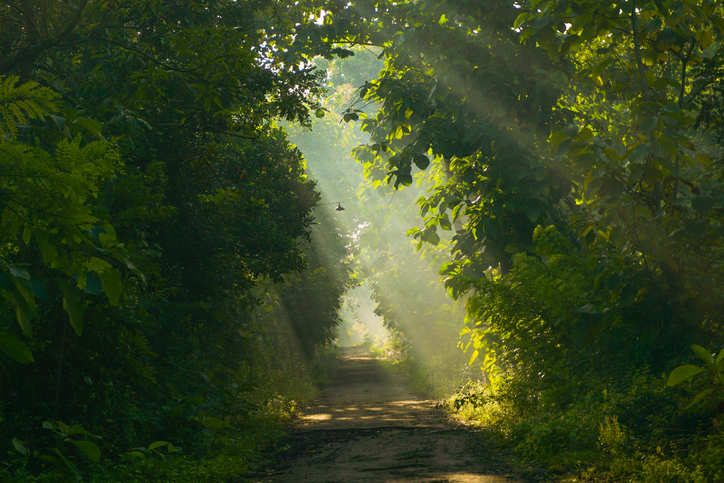
- 29 Sep 2025
In News:
- Brazil is set to become the first country to invest in the Tropical Forests Forever Facility (TFFF) — a multilateral fund designed to support long-term tropical forest conservation.
- The announcement is expected to be made at the United Nations headquarters in New York, marking a major step toward reshaping global climate finance ahead of COP30, which Brazil will host in Belém, Amazon region, in November.
About the Tropical Forests Forever Facility (TFFF)
- Origin: Proposed by Brazil during COP28 (UAE, 2023), the TFFF aims to create a permanent, self-sustaining financial mechanism to conserve tropical forests across the globe.
- Nature: It is a global, multilateral, and endowment-style fund—the first of its kind—dedicated exclusively to protecting tropical forests and ensuring steady, performance-based payments to countries maintaining their forest cover.
- Goal: To mobilize USD 125 billion through a blended finance structure, combining sovereign and private-sector contributions.
Financial Structure and Mechanism
- Funding Model:The fund will function as a permanent endowment, investing its corpus in diversified financial portfolios that generate sustainable returns.
- The returns will finance annual stipends to participating tropical forest countries (TFCs), based on the extent of their standing forests.
- Composition of Funds:
- Sponsors (20%) – High-income countries (as per World Bank classification) and global philanthropies.
- Market Investors (80%) – Institutional investors, sovereign wealth funds, and endowments participating via debt instruments (such as green bonds).
- Fund Management: Likely to be handled by a Multilateral Development Bank (MDB) such as the World Bank, ensuring transparency and credibility.
- Initial Target:To reach the full USD 125 billion goal, Brazil plans to secure an initial USD 25 billion from governments and philanthropies, which would serve as an anchor to attract an additional USD 100 billion from private investors.
Brazil’s Role and Strategic Intent
- Brazil’s upcoming investment will make it the first contributor to the fund — signaling its confidence in the mechanism and encouraging other nations to follow suit.
- According to official sources, the investment amount will be “considerable,” intended to set a benchmark and demonstrate Brazil’s commitment to global forest conservation.
- As home to the world’s largest tropical rainforest, Brazil stands to receive significant future payouts under the TFFF, reinforcing its dual role as a beneficiary and a leader in climate stewardship.
Global Participation and Support
- Several countries have already expressed interest in joining the initiative, including China, the United Kingdom, France, Germany, Norway, Singapore, and the United Arab Emirates.
- Notably, China has conveyed its intention to contribute among the first investors — a move seen as a potential turning point in global climate finance, traditionally dominated by Western donors.
Significance
- Bridging Climate Finance Gaps:The TFFF introduces a results-based, long-term funding model for forest conservation, shifting away from short-term grants toward permanent, scalable financing.
- Shared Global Responsibility:The participation of both developed and developing nations underscores a more equitable climate finance architecture, aligning with the principle of common but differentiated responsibilities (CBDR).
- Boost to COP30 and Viksit Bharat 2047 Goals:Brazil’s leadership strengthens its position ahead of COP30 and aligns with India’s own emphasis on sustainable development and green finance under Mission LiFE and Viksit Bharat 2047 frameworks.
- Preserving Global Carbon Sinks:By rewarding countries for maintaining forests, the fund provides a direct economic incentive for protecting vital ecosystems that regulate global climate patterns.
Adi Yuva Fellowship & Adi Karmayogi Volunteers Programme
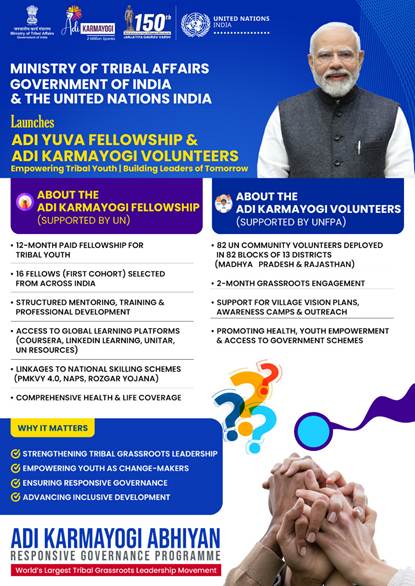
- 29 Sep 2025
In News:
- The Ministry of Tribal Affairs (MoTA), in partnership with the United Nations in India, has launched the Adi Yuva Fellowship and the Adi Karmayogi Volunteers Programme under the umbrella of the Adi Karmayogi Abhiyan — a flagship initiative envisioned as the world’s largest tribal grassroots leadership movement.
- These initiatives aim to empower tribal youth, strengthen grassroots governance, and promote inclusive development in alignment with the goals of Viksit Bharat 2047 and the 2030 Agenda for Sustainable Development.
About Adi Karmayogi Abhiyan
- Coverage: Targets 11 crore citizens across 1 lakh tribal-dominated villages in 550 districts of 30 States and UTs.
- Objective: To transform governance into a people’s movement rooted in responsive, accountable, and citizen-centric administration.
- The ongoing Adi SewaParv (17 September – 2 October 2025) focuses on preparing Tribal Village Vision 2030 Action Plans through community–government collaboration.
1. Adi Yuva Fellowship
Overview
The Adi Yuva Fellowship, supported by UN India, is a first-of-its-kind national programme designed to nurture tribal youth leadership through structured learning, mentorship, and professional development.
Key Features
- Duration: 12-month paid fellowship with a tailored learning plan combining knowledge-building, on-the-job training, and reflective practice.
- Support Package: Monthly allowances, comprehensive health and life insurance, and access to UN and commercial learning platforms.
- Skill Linkages: Fellows will be connected to national employability schemes such as:
- Pradhan Mantri Kaushal Vikas Yojana (PMKVY) 4.0
- National Apprenticeship Promotion Scheme (NAPS)
- PM Viksit Bharat Rozgar Yojana
- Mentorship and Exposure: Fellows will receive structured mentorship, engage in peer learning, and gain exposure to national and international platforms.
- Deployment: The first batch of 16 Fellows will be selected through a competitive process and placed with UN agencies at national, state, and district levels.
Objective
To build a cadre of empowered tribal youth who can contribute to governance, entrepreneurship, innovation, and community-led development, ensuring that tribal voices shape India’s growth story.
2. Adi Karmayogi Volunteers Programme
Overview
Supported by the United Nations Population Fund (UNFPA), the Adi Karmayogi Volunteers Programme is aimed at strengthening last-mile service delivery and promoting community participation in tribal regions.
Key Features
- Deployment:
- 82 Adi Karmayogi Volunteers (UN Community Volunteers) deployed across 82 blocks in 13 districts of Madhya Pradesh and Rajasthan.
- They will engage in anintensive two-month grassroots programme.
- Role and Activities:
- Support preparation of Village Vision 2030 Action Plans.
- Conduct awareness campaigns, outreach drives, and capacity-building sessions.
- Facilitate improved access to government schemes and services.
- Outcome: Strengthen inclusive governance, local participation, and service delivery at the village level.
Significance of the Initiatives
1. Empowering Tribal Youth
- Provides structured opportunities for skill enhancement, leadership, and employability.
- Bridges the gap between education, governance, and community development.
2. Strengthening Governance
- Promotes citizen-centric and participatory governance in tribal regions.
- Empowers communities to actively contribute to their own development vision.
3. Advancing India–UN Partnership
- Demonstrates India’s collaborative approach towards achieving the Sustainable Development Goals (SDGs).
- Highlights the One UN approach for inclusive and sustainable growth.
India’s first overseas defence manufacturing facility
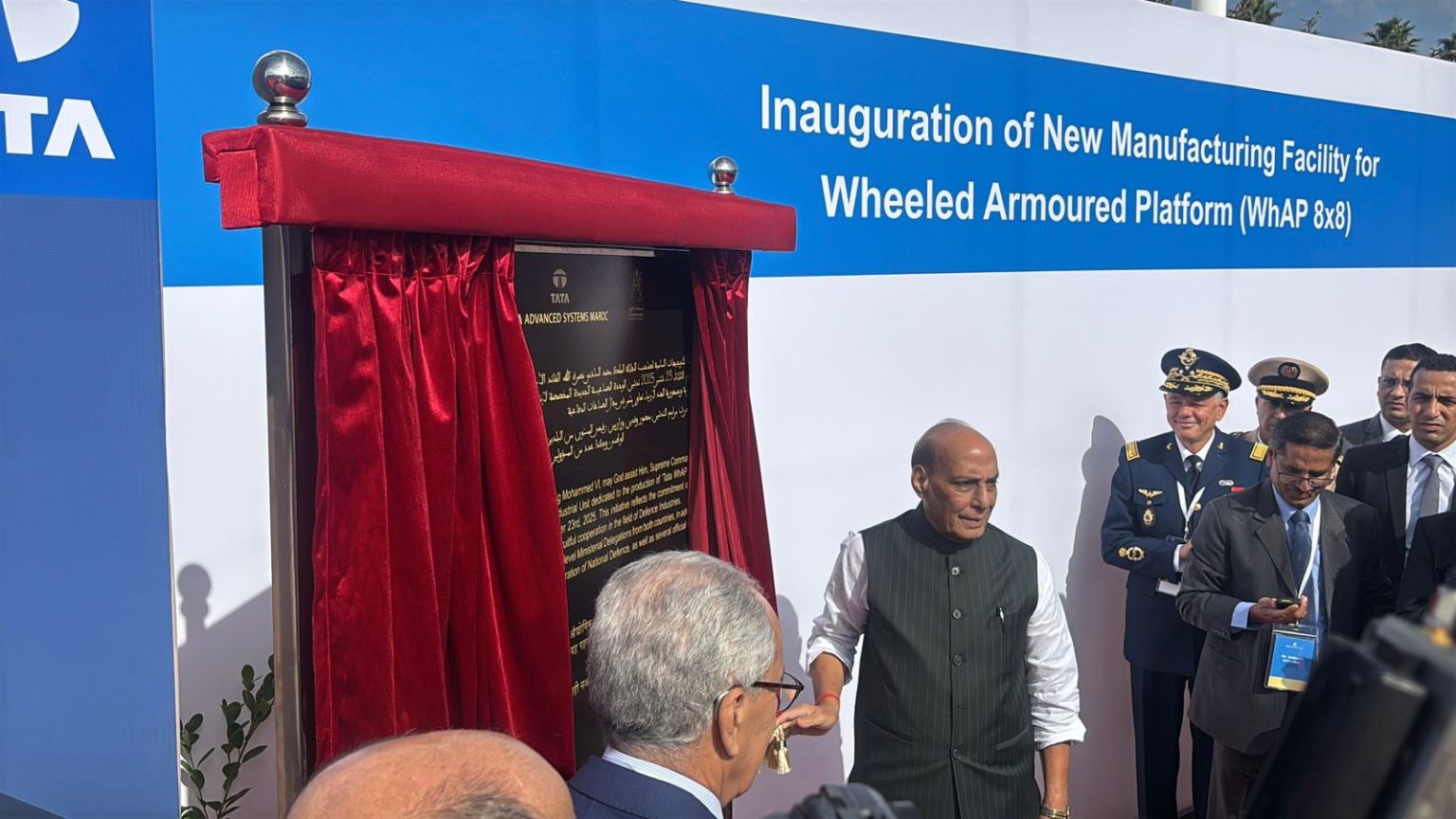
- 29 Sep 2025
In News
- In a major step towards expanding India’s defence industrial footprint globally, Defence Minister Rajnath Singh and his Moroccan counterpart AbdelatifLoudyi jointly inaugurated India’s first overseas defence manufacturing facilityatBerrechid, Morocco.
- Set up by Tata Advanced Systems Limited (TASL) in collaboration with the Defence Research and Development Organisation (DRDO), the facility marks a historic milestone in India’s defence diplomacy and the growing strategic partnership between India and Morocco.
About the Facility
- Location:Berrechid, Morocco
- Established by: Tata Advanced Systems Limited (TASL) in partnership with DRDO
- Launched in: 2025
- Scale: Spread over 20,000 sq. metres, it is Morocco’s largest defence manufacturing facility and India’s first such overseas plant by a private defence company in Africa.
- Primary Production: The Wheeled Armoured Platform (WhAP) — an indigenously developed 8×8 modular combat vehicle jointly designed by TASL and DRDO.
Key Features
- Product Range: The WhAP will be produced in multiple configurations including:
- Infantry Fighting Vehicle
- Armoured Personnel Carrier
- Reconnaissance Vehicle
- Command Post
- Mortar Carrier
- Armoured Ambulance
- Technical Capabilities:
- Equipped with advanced mobility, armour protection, remote weapon stations, and anti-tank guided missile systems.
- Incorporates indigenous technologies and customised modular design for varied combat roles.
- Local Sourcing:
- Initially, one-third of components will be sourced locally from Morocco.
- This is expected to increase to 50% in later phases, fostering industrial collaboration and technology transfer.
Strategic Objectives
The facility aims to advance India’s Aatmanirbhar Bharat vision beyond domestic production to global partnerships under the theme “Make with Friends, Make for the World.”
Key Goals:
- Strengthen India–Morocco defence cooperation and bilateral industrial partnerships.
- Promote defence exports and technology sharing with friendly nations.
- Support regional security and stability across Africa and Europe through capacity-building.
Significance
1. Strategic and Diplomatic
- Establishes Morocco as a strategic hub for Indian defence manufacturing in North Africa and Europe.
- Deepens India’s defence diplomacy and enhances its global footprint in high-technology sectors.
- Reinforces India’s credibility as a trusted partner in defence collaboration.
2. Economic and Industrial
- Generates direct and indirect employment in Morocco.
- Develops a local supplier ecosystem and supports critical technology capabilities within the host nation.
- Boosts India’s defence exports while contributing to Morocco’s industrial development.
3. Technological and Strategic Autonomy
- Demonstrates India’s growing capability to design, produce, and export advanced defence systems.
- Showcases India’s transition from import dependence to a global exporter of high-end military technologies.
World Food India (WFI) 2025
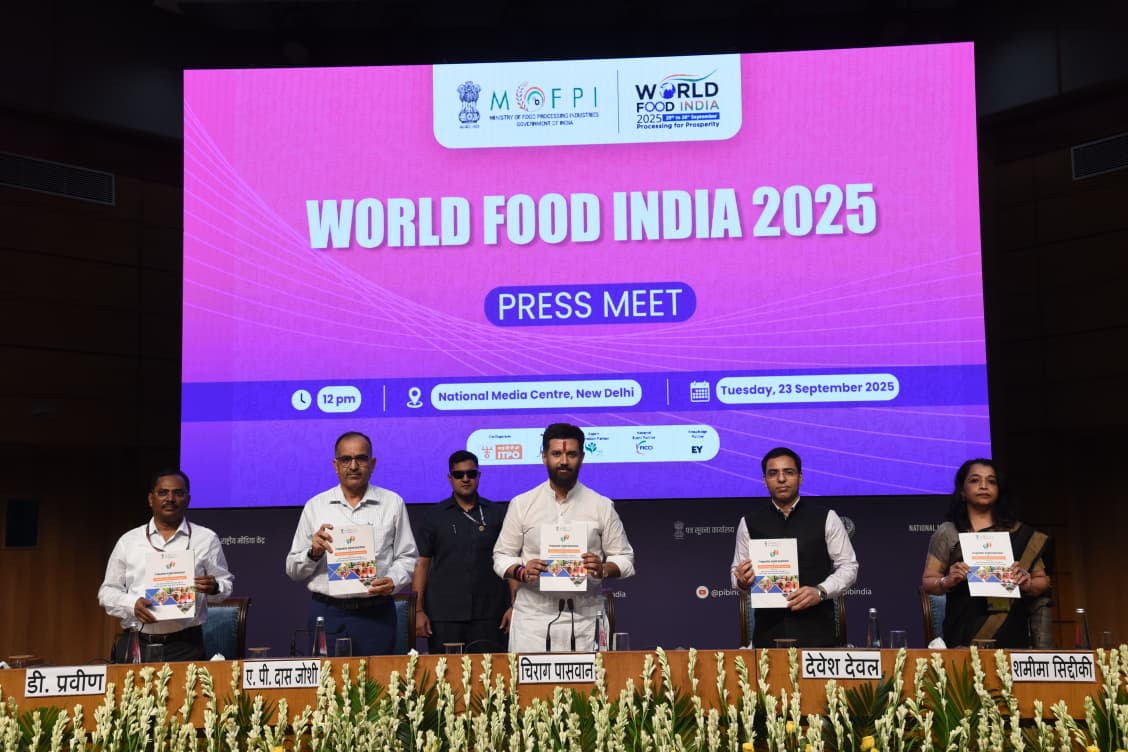
- 29 Sep 2025
In News:
The fourth edition of World Food India (WFI) 2025was held at Bharat Mandapam, New Delhi, organised by the Ministry of Food Processing Industries (MoFPI).
Overview
World Food India is the flagship global event of MoFPI that brings together key stakeholders from across the food ecosystem — governments, industry leaders, investors, and innovators — to strengthen India’s positioning as the “Food Basket of the World.”
Since its inception in 2017, the event has evolved into a transformative platform for food innovation, investment, and sustainability. The 2025 edition, spread across 1,00,000 sq. metres, is the largest congregation in the history of India’s food processing sector, with participation from:
- 21 countries, 21 States/UTs, 10 Central Ministries, and 5 allied organisations
- Over 1,700 exhibitors, 500 international buyers, and representatives from 100+ nations
Key Highlights of World Food India 2025
Partner and Focus Countries
- Partner Countries: New Zealand and Saudi Arabia
- Focus Countries: Japan, Russia, UAE, and Vietnam
Parallel and Thematic Events
- 3rd Global Food Regulators Summit (FSSAI): To harmonise international food safety standards.
- 24th India International Seafood Show (SEAI): To promote India’s seafood export potential.
- Reverse Buyer–Seller Meet (APEDA): Featuring over 1,000 buyers to boost agri-food exports.
- Knowledge Sessions: 45+ conferences, thematic discussions, and CXO roundtables with 100+ global agri-food leaders.
- Special Pavilions: Dedicated spaces for States, Ministries, Pet Food, Technology, Startups, and International exhibitors.
Core Pillars of WFI 2025
The 2025 edition revolves around five strategic pillars reflecting the government’s holistic vision for the food processing sector:
- Sustainability and Net Zero Food Processing – promoting climate-resilient and energy-efficient processing systems.
- India as a Global Food Processing Hub – showcasing India’s vast agri-resource base and processing potential.
- Frontiers in Food Processing, Products, and Packaging Technologies – highlighting innovation and technology adoption.
- Food for Nutrition, Health, and Wellness – aligning with the goals of nutritional security and public health.
- Livestock and Marine Products Driving the Rural Economy – boosting rural livelihoods and export competitiveness.
Significance of World Food India 2025
Economic Impact
- Attracts global and domestic investment in R&D, startups, logistics, and cold chain infrastructure.
- Enhances farm-to-fork linkages and promotes value addition across the supply chain.
Strategic Importance
- Reinforces India’s commitment to sustainable food systems in line with the UN Sustainable Development Goals (SDGs).
- Fosters international collaboration in technology, innovation, and regulatory frameworks.
Global Positioning
- Projects India as a leader in food innovation, safety, and sustainability.
- Strengthens India’s image as a trusted global supplier of high-quality, nutritious, and sustainable food products.
Exercise Cold Start
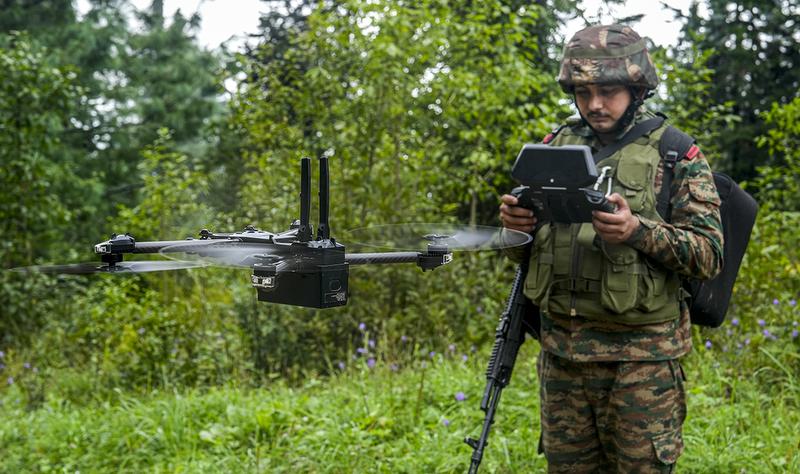
- 29 Sep 2025
In News:
- India will conduct a major tri-service exercise, ‘Cold Start’, in the first week of October 2025 in Madhya Pradesh.
- The exercise, involving the Army, Navy, and Air Force, will focus on testing drones and counter-drone systems to strengthen the country’s integrated air defence capabilities.
- It is being described as the largest such joint drill since Operation Sindoor.
About Exercise Cold Start
- Nature: A tri-service military exercise designed to simulate aerial threats and defence responses using drones, UAVs, and counter-drone systems.
- Objective:
- To evaluate operational readiness of the armed forces against evolving aerial threats.
- To identify technological and procedural gaps in India’s air defence systems.
- To enhance interoperability and coordination between the three defence services.
- Participants:
- Indian Army, Navy, and Air Force as primary participants.
- Supported by industry partners, research and development (R&D) agencies, and academic institutions, fostering a military–industry–academia partnership.
Key Features
- Live demonstrations of drones and counter-drone systems.
- Integration of GPS jamming, electronic warfare, and surveillance technologies.
- Testing of indigenous technologies developed through collaboration between defence R&D and private industry.
- Conceptual inspiration: The integrated air defence approach draws from the Sudarshan Chakra—symbolising a seamless and multi-layered defensive network against drones, UAVs, and hypersonic weapons.
Significance
- Enhances Jointness: Promotes synergy among the three defence services in technology-driven warfare.
- Technological Edge: Strengthens India’s counter-drone warfare capabilities and electronic warfare resilience.
- Strategic Readiness: Demonstrates India’s preparedness to respond to emerging aerial and cyber threats in the evolving domain of modern warfare.
- Defence Innovation: Encourages indigenous R&D and strengthens public–private collaboration in developing next-generation air defence systems.
Viksit Bharat Buildathon 2025
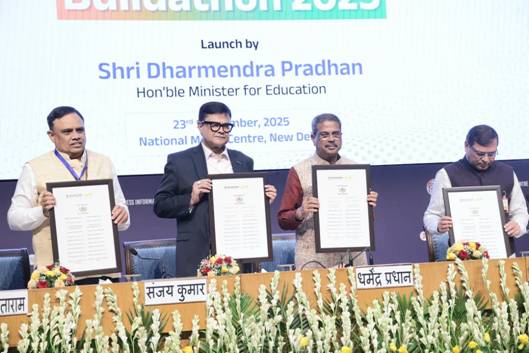
- 28 Sep 2025
In News:
- Union Education Minister Dharmendra Pradhan launched the Viksit Bharat Buildathon 2025, a nationwide school innovation movement aimed at nurturing creativity, entrepreneurship, and technological problem-solving among young students.
- The initiative seeks to transform school campuses into innovation hubs, empowering youth as the architects of a self-reliant and developed India.
About Viksit Bharat Buildathon 2025
- Organisers: Department of School Education and Literacy (DoSEL), Ministry of Education, in collaboration with Atal Innovation Mission (AIM), NITI Aayog, and the All India Council for Technical Education (AICTE).
- Culmination: January 2026, with felicitation of over 1,000 winners.
- Participants: School students across India — the largest school-level hackathon ever conducted.
Objectives
- Promote Grassroots Innovation: Cultivate a problem-solving mindset and creative thinking among school students.
- Foster Self-Reliance: Encourage innovation aligned with the principles of Atmanirbhar Bharat and Vocal for Local.
- Celebrate Swadeshi Innovation: Build indigenous solutions addressing real-world challenges.
- Enable National Development: Channel student ideas into tangible solutions for Samriddhi (prosperity) and Viksit Bharat (developed India).
- Create Global Impact: Project India as a global innovation capital and potential record-holder for the world’s largest synchronized innovation event.
Themes of the Buildathon
The competition revolves around four guiding themes that reflect India’s developmental vision:
- Vocal for Local – Promoting indigenous products and local entrepreneurship.
- Atmanirbhar Bharat – Encouraging technological self-reliance and innovation.
- Swadeshi – Leveraging traditional knowledge and indigenous technologies.
- Samriddhi – Designing solutions for inclusive and sustainable prosperity.
Structure and Timeline
|
Phase |
Timeline (2025–26) |
Key Activity |
|
Registration |
Sept 23 – Oct 6 |
Schools and students register via vbb.mic.gov.in |
|
Preparation Period |
Oct 6 – Oct 13 |
Teachers mentor student teams for ideation and submission |
|
Live Synchronized Innovation Event |
Oct 13 |
Nationwide simultaneous innovation challenge |
|
Final Submission Window |
Oct 13 – Oct 31 |
Upload of prototypes and project ideas |
|
Evaluation Phase |
Nov 1 – Dec 31 |
Expert panel assesses entries |
|
Grand Felicitation |
Jan 2026 |
Announcement of results and recognition of 1,000+ winners |
Building on Previous Success
The Buildathon builds upon the momentum of the School Innovation Marathon 2024, which led to:
- The Student Innovator Programme (SIP) and Student Entrepreneurship Programme (SEP).
- Multiple patents and startup ventures emerging from Atal Tinkering Labs (ATLs).
This continuum strengthens India’s school innovation ecosystem, linking student creativity to research, incubation, and entrepreneurship.
Significance
- Grassroots Empowerment: Encourages innovation at the school level, making every student a potential problem-solver.
- Integration with NEP 2020: Supports the National Education Policy’s emphasis on experiential learning, design thinking, and skill development.
- Atmanirbhar Bharat Vision: Aligns student innovation with national priorities of self-reliance and sustainable growth.
- Innovation Pipeline: Provides pathways for students to transition into formal innovation ecosystems — from idea to patent to startup.
- Global Positioning: Aims to showcase India’s youth-driven innovation capacity on international platforms.
India’s Fusion Energy Roadmap
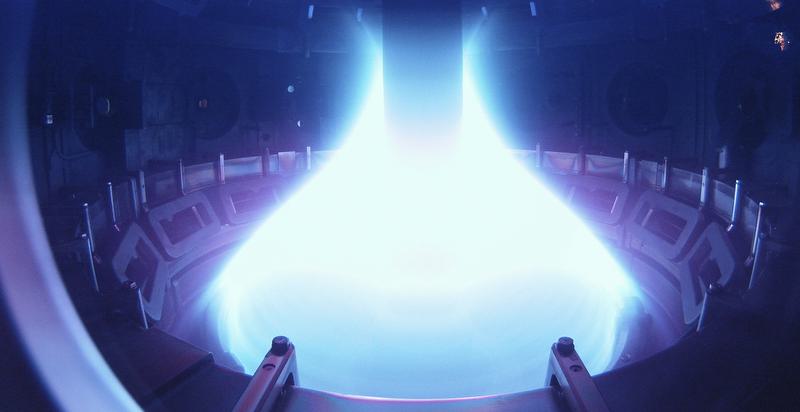
- 28 Sep 2025
In News:
- Researchers at the Institute for Plasma Research (IPR), Gandhinagar, have unveiled a comprehensive roadmap for India’s fusion energy programme.
- This initiative aims to develop the country’s first fusion electricity generator, Steady-state Superconducting Tokamak–Bharat (SST-Bharat), and ultimately commission a demonstration reactor by 2060.
- The roadmap signifies a major step in India’s pursuit of sustainable, high-yield, and low-waste energy alternatives.
Understanding Nuclear Fusion
Nuclear fusion is the process where two light atomic nuclei (like isotopes of hydrogen) merge to form a heavier nucleus, releasing immense energy—similar to the reactions that power the Sun.
It differs from nuclear fission, where heavy atoms split apart to release energy.
Advantages of Fusion over Fission
- Minimal radioactive waste and no long-term storage challenges.
- Abundant fuel sources (deuterium from water, tritium from lithium).
- No greenhouse gas emissions and no meltdown risk.
- High energy density, offering a virtually limitless energy source.
India’s Current Fusion Research Base
- SST-1 Tokamak (IPR, Gandhinagar): India’s first steady-state superconducting tokamak, designed for plasma research. It has achieved plasma duration of ~650 milliseconds, with potential to reach 16 minutes.
- Participation in ITER (France): India contributes technology, components, and funding to the International Thermonuclear Experimental Reactor (ITER), the world’s largest magnetic confinement experiment aimed at demonstrating a Q-value (output/input ratio) of 10.
India’s Fusion Power Roadmap
1. The SST-Bharat Project
- A fusion-fission hybrid reactor proposed as India’s next major milestone.
- Expected output: 130 MW (100 MW from fission, 30 MW from fusion).
- Estimated cost: ?25,000 crore.
- Efficiency target: Five times the input power.
- Acts as a bridge technology toward achieving pure fusion energy.
2. Demonstration Reactor (By 2060)
- Planned 250 MW full-scale reactor.
- Target Q-value: 20 (i.e., producing 20 times more energy than input).
- Will use magnetic confinement, heating plasma to over 100 million°C — much hotter than the Sun’s core (15 million°C).
Technological Innovations Proposed
- Digital Twinning: Creating virtual replicas of tokamak systems to test and optimise operations before physical construction.
- Machine Learning-Assisted Plasma Control: Using AI for real-time monitoring and stability of plasma.
- Radiation-Resistant Materials: Essential for reactor longevity and safety.
- Superconducting Magnet Development: To maintain continuous plasma confinement efficiently.
Global Benchmarks and India’s Position
|
Country/Programme |
Reactor/Initiative |
Target Year |
Notable Achievement |
|
UK |
STEP Programme |
2040 |
Prototype fusion power plant planned |
|
USA |
Private Start-ups |
2030s |
Early grid-connected fusion target |
|
China |
EAST Tokamak |
Ongoing |
Record plasma duration |
|
France |
WEST Tokamak |
2025 |
Maintained plasma for 22 minutes |
|
India |
SST-Bharat & Demo Reactor |
2060 |
Gradual, state-led development path |
While global players pursue faster timelines, India’s approach is cautious but strategic, focused on self-reliance and steady technological progress.
Challenges in India’s Fusion Path
Technological
- Sustaining stable plasma for long durations.
- Achieving Q > 1 (self-sustaining fusion).
- Developing durable superconducting magnets and radiation-resistant materials.
Financial
- High costs: SST-Bharat alone costs ?25,000 crore.
- Competing priorities: Solar, wind, and fission projects receive higher funding.
- Limited private-sector participation compared to global trends.
Policy and Governance
- Absence of a dedicated fusion energy regulatory framework.
- Need for integrated policy support under India’s Net Zero 2070 commitments.
Economic Viability
Experts like M.V. Ramana (University of British Columbia) caution that commercial fusion power remains economically unproven, and timelines are often optimistic. High R&D and construction costs could make fusion electricity expensive compared to renewables.
Strategic and Technological Significance
Even if commercial viability takes time, fusion R&D brings collateral benefits:
- Advances in plasma physics, superconducting technology, and high-temperature materials.
- Development of radiation-hardened components for defence, space, and nuclear industries.
- Strengthened technological autonomy and enhanced participation in global research networks.
Impatiens Selvasinghii
- 28 Sep 2025
In News:
- In a significant botanical discovery, researchers from Madura College, Madurai, have identified a new species of flowering plant belonging to the genus Impatiens in the Kudremukh range of the Western Ghats, Karnataka.
- The species has been named Impatiens selvasinghii in honour of Dr. P. Selva Singh Richard, Associate Professor of Botany at Madras Christian College (MCC), for his pioneering contributions to the study of reproductive biology of endemic and endangered plants of the Western Ghats.
Key Details of the Discovery
- Location:Kudremukh Peak, Chikkamagaluru district, Karnataka
- Altitude: Approximately 1,630 metres above sea level
- Published in:Taiwania, an international peer-reviewed botanical journal
- Unique Features: The species is distinguished by its exceptionally small flowers—the smallest among known balsams of the Western Ghats—and prominently lobed wing petals.
- Ecological Role: Small insects are dependent on this species for survival, underscoring its role in the local micro-ecosystem.
The Genus Impatiens in India
- India hosts over 280 taxa of Impatiens, widely distributed across the Eastern Himalayas and the Western Ghats.
- About 210 taxa are endemic to India, with 130 species unique to the Western Ghats.
- Notably, around 80% of the Impatiens species in the Western Ghats are categorized as endangered, highlighting the region’s ecological vulnerability.
Conservation Concerns
Researchers have cautioned that Impatiens selvasinghii is located along a popular trekking route in Kudremukh, where over-tourism and habitat disturbance could threaten its survival. Given the fragile mountain ecosystem and high endemicity of balsam species, measures for habitat protection and responsible ecotourism are vital.
Clean Plant Programme (CPP)
- 28 Sep 2025
In News:
- The Clean Plant Programme (CPP), conceptualized by the Ministry of Agriculture and Farmers Welfare in collaboration with the Asian Development Bank (ADB), is emerging as a transformative initiative aimed at ensuring healthy, disease-free planting material of key fruit crops.
- Approved by the Union Cabinet, CPP is implemented by the National Horticulture Board (NHB) with technical guidance from the Indian Council of Agricultural Research (ICAR).
Background and Rationale
India faces growing challenges to plant health from climate change, pests, and systemic pathogens, especially viruses, which significantly reduce crop quantity, quality, and longevity. By the time disease symptoms manifest, management in the field becomes difficult and often ineffective. Providing disease-free planting material has therefore been recognized as the most efficient preventive strategy.
CPP aligns with broader initiatives such as Mission LiFE (Lifestyle for Environment) and the National One Health Mission, promoting sustainable, eco-friendly agriculture and integrated management of human, animal, and environmental health risks.
Key Features of CPP
- For Farmers: Ensures access to virus-free, high-quality planting material to improve yields, income, and resilience against climate-induced pest and disease pressures.
- For Nurseries: Streamlined certification, infrastructure support, and technical guidance help nurseries propagate clean material efficiently.
- For Consumers: Delivers superior-quality fruits free from viruses, enhancing taste, appearance, and nutritional value.
- For Exports: Strengthens India’s global position by promoting high-quality, disease-free fruits.
- Equity and Inclusivity: Facilitates affordable access for all farmers, engages women in training and decision-making, and develops region-specific varieties for India’s diverse agro-climatic zones.
Investment and Implementation
CPP represents an investment of ?1,765.67 crore, including an ADB loan of $98 million. Key developments include:
- Nine Clean Plant Centres across India, including three in Maharashtra for grapes (Pune), oranges (Nagpur), and pomegranates (Solapur).
- Financial support for nurseries: ?3 crore for large nurseries and ?1.5 crore for medium nurseries. Expected annual production of 8 crore disease-free seedlings.
- Establishment of a national-level research laboratory in Pune for original plant species research.
- International collaboration with countries such as Israel and the Netherlands.
On-Ground Actions and Progress
- Hazard Analysis (HA): Virus profiling for grapevine, apple, and citrus crops, forming the foundation for Clean Plant Centers and certification.
- Nursery and Lab Assessments: NHB, ICAR, and ADB teams evaluated nurseries and laboratories across states for readiness, infrastructure, and bioinformatics capability.
- Clean Plant Propagation: Material testing, virus elimination through tissue culture, heat, or cryotherapy, and distribution through accredited nurseries to farmers.
- Digital and Resource Platforms: CPP website serves as a central hub for updates, resources, and technical guidance.
Alignment with Other Initiatives
- Mission LiFE: Encourages sustainable environmental practices and individual/community-level action to conserve natural resources.
- National One Health Mission: Integrates human, animal, and environmental health to manage disease risks and improve productivity.
- Mission for Integrated Development of Horticulture (MIDH): CPP complements MIDH’s goals of providing quality planting material and micro-irrigation to enhance horticultural productivity, which has increased from 12.10 MT/ha (2019–20) to 12.56 MT/ha (2024–25, 2nd advance estimates).
Industrial Park Rating System 3.0
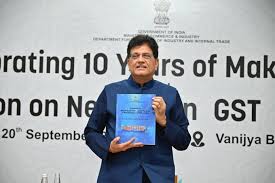
- 28 Sep 2025
In News:
- Recently, the Union Minister of Commerce and Industry, Shri Piyush Goyal, launched the Industrial Park Rating System (IPRS) 3.0 in New Delhi as part of the decade-long celebrations of the Make in India initiative.
- Developed by the Department for Promotion of Industry and Internal Trade (DPIIT) with support from the Asian Development Bank (ADB), IPRS 3.0 aims to benchmark and enhance the competitiveness of industrial parks across India.
Background and Evolution
The IPRS initiative began in 2018 as a pilot project, followed by IPRS 2.0 in 2021. The third edition builds upon these earlier versions by introducing a more comprehensive framework to assess industrial infrastructure, operational efficiency, and overall competitiveness.
Features of IPRS 3.0
IPRS 3.0 evaluates industrial parks based on multiple parameters, including:
- Sustainability and green infrastructure
- Logistics connectivity
- Digitalization
- Skill linkages
- Tenant feedback
Based on performance across these indicators, industrial parks are categorized into Leaders, Challengers, and Aspirers. This benchmarking enables stakeholders, including investors and policymakers, to access reliable and transparent data, identify best practices, and implement targeted interventions.
Significance for Industrial Development
The launch of IPRS 3.0 aligns with India’s broader strategy to create world-class industrial infrastructure. It provides States and Union Territories with an opportunity to:
- Showcase high-performing industrial parks
- Identify gaps for infrastructure improvement
- Attract domestic and foreign investments
- Generate employment
- Strengthen their industrial ecosystem
AI-enabled Centre at Betla National Park
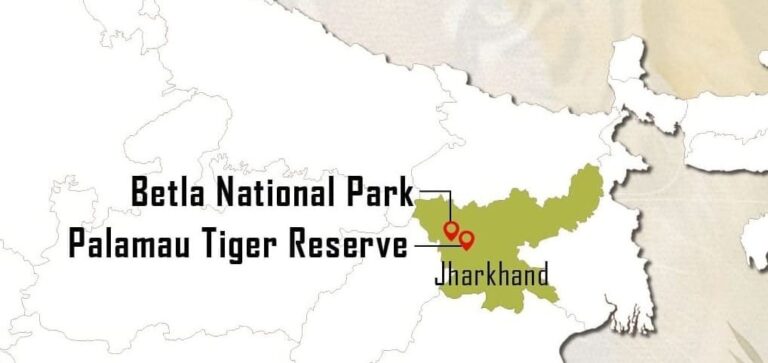
- 27 Sep 2025
In News:
Betla National Park, located in Latehar district, Jharkhand, will soon host India’s first AI-enabled nature experience centre. Part of the Palamu Tiger Reserve (PTR), the park is known for its rich biodiversity, including tigers, elephants, and diverse flora and fauna. PTR is one of the first nine tiger reserves established under Project Tiger (1973), covering a total area of 1,129.93 sq. km, and was notified as a National Park in 1986.
About the AI-Enabled Centre
The centre, developed by Palamu Tiger Reserve authorities under Deputy Director Prajesh Kant Jena, aims to provide visitors with an immersive, high-tech wildlife experience. Unlike conventional nature interpretation centres, it will use cutting-edge technologies to recreate the dynamics of the jungle ecosystem, including:
- AI assistants for guided learning.
- 3D holographic projections to display lifelike animal behaviour.
- Augmented Reality (AR) and immersive sound effects to simulate waterfalls, bird calls, predator-prey interactions, and herd movements.
- Ecosystem simulation, portraying animal movement, food-sharing activities, and other natural behaviours in a realistic manner.
Purpose and Significance
The centre, themed “Threads of Nature,” is designed to convey the interconnection between humans and nature. Key objectives include:
- Enhancing eco-tourism by offering a realistic jungle experience, including sightings of tiger hunts, elephant herds, and lions.
- Promoting conservation awareness through interactive learning and observation tools.
- Supporting researchers and nature enthusiasts with virtual wildlife monitoring capabilities.
Unique Features
While nature interpretation centres have existed in Betla since the 1970s, this facility represents the first high-tech effort in India to integrate AI, AR/VR, holograms, and immersive sound for wildlife education. Visitors will not just see static models or photographs but will experience the sights, sounds, and atmosphere of a living jungle, providing a deeper understanding of ecosystem dynamics.
By merging technology with conservation education, the Betla AI-enabled centre is poised to become a pioneering hub for tourism, research, and ecological awareness in Jharkhand and across India.
Combined Operational Review and Evaluation (CORE) Programme
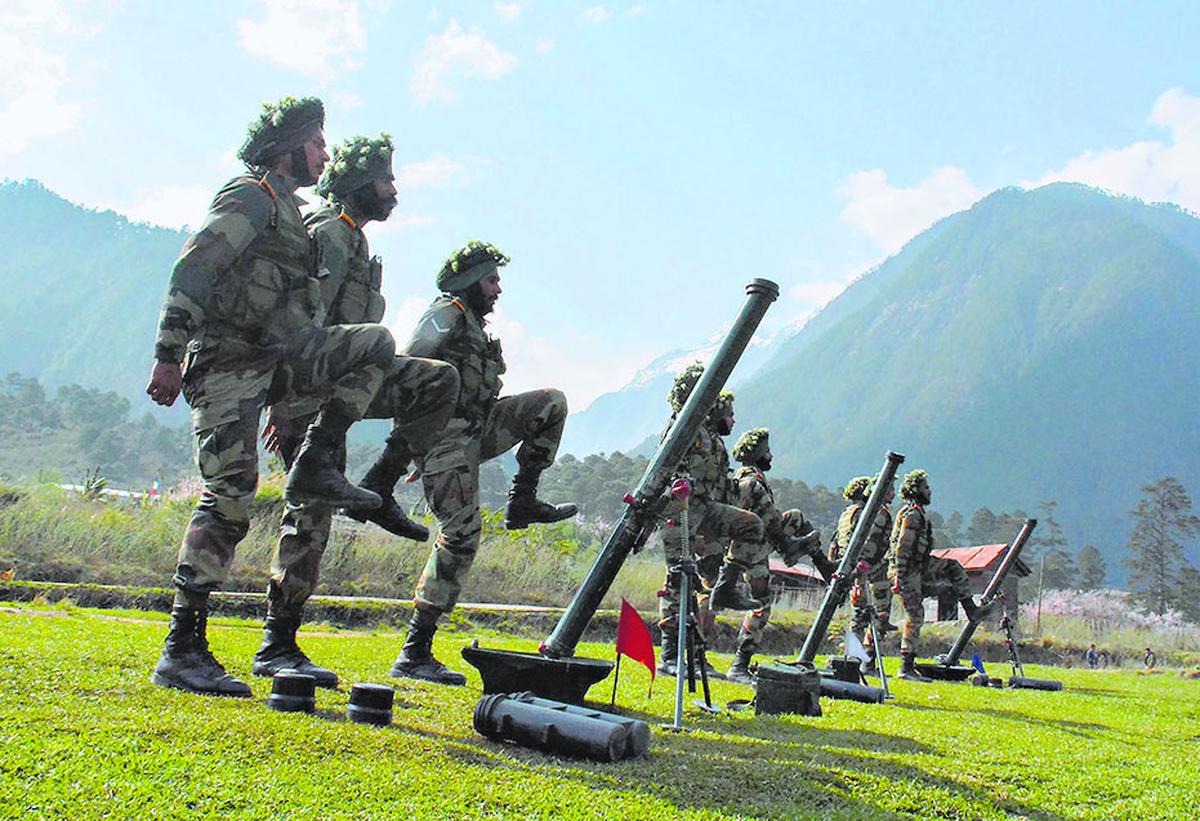
- 27 Sep 2025
In News:
- The Headquarters Integrated Defence Staff (HQ IDS) is organising the Combined Operational Review and Evaluation (CORE) Programme at the United Service Institution of India, New Delhi.
- The initiative serves as a unique platform for civil-military engagement on national and regional security, bringing together senior officers from the Indian Armed Forces alongside officials from the Ministries of Defence, External Affairs, and Home Affairs.
Objectives and Significance
The CORE Programme aims to:
- Strengthen civil-military synergy in addressing multidimensional security threats.
- Enhance strategic awareness among senior officers and develop their capacity for balanced, pragmatic decision-making.
- Foster leadership development and inter-agency coordination in complex national and international security scenarios.
The programme underscores HQ IDS’s commitment to jointness within the Armed Forces and professional development, preparing participants to navigate dynamic security challenges effectively.
Key Themes and Focus Areas
The CORE Programme covers a spectrum of contemporary security issues, including:
- Regional and global security challenges
- Technological transformation of warfare
- Strategic communication
- Inter-agency collaboration and joint problem-solving
The programme employs a combination of lectures, interactive discussions, and sessions with subject-matter experts and professionals from diverse fields. This approach broadens participants’ outlook, encourages collaborative solutions, and strengthens the intellectual foundations of senior leadership.
Participants
The five-day programme brings together senior civil and military officers, facilitating a holistic understanding of national security from multiple perspectives. By promoting dialogue across the defence and civilian sectors, CORE enhances preparedness to address complex, multidimensional threats at both national and international levels.
Phytosaur fossil
- 27 Sep 2025
In News:
Recent paleontological excavations in Megha village, Fatehgarh subdivision, Jaisalmer district, Rajasthan, have uncovered fossilised remains that may belong to a Phytosaur, a large, extinct semi-aquatic reptile. This discovery has generated significant excitement in the scientific community and reinforces Jaisalmer’s reputation as a paleontological hotspot.
About Phytosaurs
Phytosaurs are extinct reptiles of the order Phytosauria, resembling modern crocodiles, which thrived during the Late Triassic to Early Jurassic period. They displayed morphological diversity, including:
- Long-snouted forms (primarily fish-eating)
- Short-snouted forms (adapted for terrestrial prey)
- High-snouted forms (generalist feeders)
Phytosaur fossils have been reported in India, Europe, North America, Brazil, Morocco, Thailand, and Madagascar, highlighting their wide distribution and evolutionary significance.
Significance of the Find
The Megha village fossil adds to Jaisalmer’s growing list of paleontological finds, which includes dinosaur footprints, shark fossils, and marine remains. Experts suggest that the site may contain additional hidden fossils, which could provide crucial insights into:
- The evolution of prehistoric reptiles
- Convergent evolution with modern crocodilians
- Jurassic-era biodiversity and climate in India
If confirmed as a Phytosaur, the fossil will enhance our understanding of prehistoric fauna in the Indian subcontinent and strengthen the region’s global paleontological significance.
Striped Dolphin
- 27 Sep 2025
In News:
- In a rare observation, a pod of striped dolphins (Stenella coeruleoalba) was recently sighted off the Visakhapatnam coast in Andhra Pradesh.
- The sighting, captured on video by a local fisherman from Muthyalammapalem, has drawn attention to the rich but under-documented marine biodiversity of India’s eastern coastline.
- The species was identified by the East Coast Conservation Team (ECCT) with assistance from the Marine Mammal Research and Conservation Network of India — marking one of the few verified records of striped dolphins in Andhra waters.
About Striped Dolphins (Stenella coeruleoalba)
|
Aspect |
Details |
|
Family |
Delphinidae (Oceanic dolphins) |
|
IUCN Status |
Least Concern |
|
Distribution |
Found in tropical and temperate waters of all major oceans — including the Mediterranean Sea, Japan, South Africa, Western Australia, New Zealand, and occasionally, Indian waters. |
|
Habitat |
Prefer deep offshore waters and upwelling zones where nutrient-rich cold water supports abundant marine life. Often found near continental shelf edges. |
|
Physical Features |
Length: ~2.2–2.6 m; streamlined body; long beak (rostrum); tall, curved dorsal fin. Notable dark stripes run from the beak through the eye and down the sides, giving the species its name. |
|
Behaviour |
Found in tight pods of 25–100 individuals. Known for acrobatics such as breaching, leaping, and the characteristic “roto-tailing” — a spinning motion of the tail while airborne. |
|
Lifespan |
Up to 58 years. |
|
Diet |
Primarily small fish, squid, and crustaceans. |
Ecological and Conservation Significance
The recent sighting highlights the ecological richness of the Bay of Bengal, especially the Visakhapatnam coast, which supports diverse marine fauna but remains scientifically under-surveyed.
Such sightings are crucial for:
- Enhancing knowledge about the migratory patterns and population structure of marine mammals in Indian waters.
- Assessing ecosystem health, since dolphins are indicator species reflecting the condition of marine food chains.
- Formulating regional conservation policies for marine biodiversity and sustainable fisheries.
The ECCT’s collaboration with fishermen exemplifies a community-based conservation model, where local knowledge complements formal scientific documentation — essential for protecting fragile marine ecosystems.
Recent Discoveries Indicating Biodiversity Potential
During recent coastal surveys, researchers even rediscovered a sea slug species in Visakhapatnam that had not been recorded in nearly 180 years, further proving the hidden biodiversity of India’s east coast and the urgent need for systematic monitoring.
Protecting India’s Satellites

- 27 Sep 2025
In News:
Following a near-miss incident in 2024 between an Indian satellite and a foreign spacecraft, India has intensified efforts to protect its growing constellation of satellites. Given the critical role of satellites in national security, communication, and economic infrastructure, safeguarding them has become a strategic necessity.
Why Protecting Satellites is Crucial
India’s satellites are vital for a range of civilian and defence functions — from weather forecasting and navigation (NavIC) to internet services, surveillance, and global communications. They underpin sectors such as aviation, shipping, agriculture, and disaster management, while also enabling secure military operations.
However, these assets face increasing threats:
- Space debris and collisions — The expanding number of satellites and fragments in orbit raises the risk of accidental impacts.
- Hostile manoeuvres — Adversarial satellites may shadow or interfere with India’s space assets.
- Cyber threats — Ground stations and networks remain susceptible to hacking, jamming, and spoofing.
- Solar storms and space weather — Events like coronal mass ejections can damage satellite electronics and disrupt signals.
With the high costs of launching and maintaining satellites, ensuring their safety protects India’s technological investment and strategic autonomy.
India’s Ongoing and Planned Initiatives
- IS4OM (ISRO System for Safe and Sustainable Space Operations and Management): Located in Bengaluru, this centre continuously tracks India’s satellites and provides collision-avoidance alerts, enabling timely orbital manoeuvres to prevent accidents.
- Project NETRA (Network for Space Object Tracking and Analysis): An ambitious space surveillance system comprising radars and telescopes to build indigenous Space Situational Awareness (SSA) capabilities. It will allow India to monitor space debris and detect suspicious satellite movements in real-time.
- Aditya-L1 Mission: India’s first solar observatory mission monitors solar storms and radiation patterns, providing early warnings about solar events that could threaten satellite operations.
- ?27,000-crore Surveillance Satellite Programme (2026–2032): India has approved the launch of 52 surveillance satellites to strengthen real-time observation, border monitoring, and space domain awareness — forming the backbone of future space defence capabilities.
- CERT-In Satellite Cybersecurity Guidelines (2025): New cybersecurity protocols mandate strong encryption, network segmentation, and data protection norms to prevent satellite hacking or signal spoofing.
- IN-SPACe Licensing and Regulation: Private players are now integrated into India’s space ecosystem, but under strict safety and cybersecurity standards to ensure the security of the commercial space sector.
- Debris-Free Space Mission (By 2030): Announced at the Inter-Agency Space Debris Coordination Committee (IADC) in 2024, India has pledged to adopt sustainable space practices and avoid debris creation during launches and operations.
Emerging Plan: “Bodyguard Satellites”
India is reportedly considering deploying bodyguard satellites — specialised spacecraft that will act as orbital escorts for high-value satellites.
Functions and Features:
- Proximity monitoring: Detect when debris or foreign satellites come dangerously close.
- Threat identification: Track hostile proximity operations or suspicious manoeuvres.
- Protective action: Reposition themselves or guide the protected satellite to avoid collisions or interference.
- Strategic deterrence: Aligns India with global trends where major space powers (like the US, Russia, and China) are deploying similar defensive technologies.
Challenges:
- Technological: Requires advanced sensors, AI-driven autonomy, and ultra-precise orbital manoeuvring systems.
- Financial: High development and launch costs demand sustained investment.
- Cybersecurity: Satellite-ground communication remains a potential vulnerability.
- Geopolitical: May trigger suspicion or an arms race in outer space.
- Sustainability: Increased orbital activity must not worsen the space debris problem.
Way Forward
- Strengthen indigenous SSA: Invest in LiDAR, radar, and optical satellite networks to monitor all orbital zones.
- Enhance anti-jamming and encryption systems: Build resilient, autonomous communication systems immune to interference.
- Public–Private Collaboration: Encourage startups and private firms to co-develop low-cost, high-tech satellite protection tools.
- Global cooperation: Engage actively with international bodies like COPUOS and IADC to promote transparency and responsible behaviour in space.
- Defensive-first approach: Focus on non-weaponised, sustainable defence mechanisms to maintain peace and prevent escalation in outer space.
World’s 1st Functioning AI-designed Viral Genome
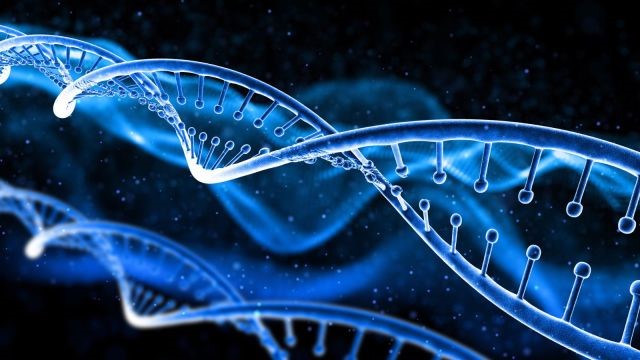
- 26 Sep 2025
In News:
Scientists at Stanford University and the Arc Institute have created the world’s first artificially designed viral genome using Artificial Intelligence (AI), marking a major milestone in computational biology and synthetic genomics. The breakthrough demonstrates AI’s capability to generate an entirely new and functional virus—one that can infect and kill bacteria.
About the Discovery
The AI-generated virus was designed using a genomic model called Evo, which functions like a “language model” for DNA. Evo was trained on nearly two million viral genomes, learning the patterns and grammar of genetic sequences—akin to how language models learn human syntax and semantics.
The model was guided to mimic the bacteriophage ΦX174 (phi-X-174), a virus that infects E. coli bacteria. This phage was chosen because:
- It has a small yet complex genome (about 5,386 DNA letters and 11 overlapping genes).
- It was the first genome ever sequenced (1977) and the first synthesized from scratch (2003)—now it is the first AI-designed genome.
How It Was Done
- Training the AI: Evo was trained on millions of viral sequences to understand gene order, composition, and regulatory logic.
- Design Phase: Using prompts, Evo generated thousands of potential genome designs.
- Screening & Testing: Researchers filtered these using software checks to ensure each genome contained the necessary genes and functional proteins.
- Lab Validation: Hundreds of genomes were synthesized and inserted into E. coli bacteria. Out of 302 attempts, 16 fully functional viruses emerged.
- Results:
- These viruses contained over 392 mutations never seen in nature.
- Some designs achieved functions human scientists had failed to engineer, such as borrowing DNA-packaging proteins from unrelated viruses.
- Cryo-electron microscopy confirmed the structural integrity of these AI-designed proteins within the viral shell.
What is a Virus?
A virus is a microscopic infectious agent made of nucleic acid (DNA or RNA) enclosed within a protein coat (capsid).
- It cannot replicate independently and must hijack a host cell’s machinery to reproduce.
- Many viruses cause diseases like COVID-19, AIDS, measles, and smallpox.
What is a Genome?
The genome is the complete set of DNA instructions in an organism.
- In humans, it comprises 23 pairs of chromosomes in the nucleus plus mitochondrial DNA.
- It encodes all genetic information required for growth, development, and functioning.
Significance of the Breakthrough
- Redefining Synthetic Biology:The experiment represents a leap from reading and writing genomes to designing them. AI is now capable of generating entirely new, functional genetic blueprints.
- Advancing Phage Therapy:The AI-designed bacteriophages could revolutionize phage therapy—the use of viruses to target and kill antibiotic-resistant bacteria, a major global health threat.
- Accelerating Biotechnology:This development showcases how AI can drastically accelerate genetic innovation, enabling rapid design and testing of new biological entities.
- Proof of Concept for AI-Driven Evolution:AI-generated viruses adapted to bacterial defenses faster than natural ones, indicating potential for directed evolution through computational models.
- Ethical and Regulatory Implications:While promising, the creation of new synthetic organisms underscores the need for global biosafety, biosecurity, and ethical frameworks to govern AI-driven genetic design.
High Seas Treaty of UN Reaches Entry into Force Threshold
- 26 Sep 2025
In News:
- The Biodiversity Beyond National Jurisdiction (BBNJ) Treaty, also known as the UN High Seas Treaty, has crossed the crucial threshold of 60 ratifications, enabling it to enter into force on January 17, 2026. With Morocco and Sierra Leone becoming the 60th and 61st ratifying nations, this milestone marks a historic step in the global conservation of marine biodiversity in international waters.
- So far, 143 countries, including India, have signed the treaty, reflecting strong international consensus on protecting marine ecosystems that lie beyond national boundaries.
About the BBNJ Treaty
- Full Name:Agreement under the United Nations Convention on the Law of the Sea on the Conservation and Sustainable Use of Marine Biological Diversity of Areas Beyond National Jurisdiction (BBNJ).
- Parent Framework: Builds upon the UN Convention on the Law of the Sea (UNCLOS), adopted in 1982 and effective since 1994 — often called the “Constitution for the Oceans”.
- Geographical Scope: Applies to areas beyond 200 nautical miles from the Exclusive Economic Zones (EEZs) of coastal nations, commonly referred to as the high seas.
- Coverage: These high seas account for nearly two-thirds of the global ocean and cover over 70% of the Earth’s surface, yet currently, only 1.44% are under any form of protection.
Objectives and Key Provisions
The BBNJ Treaty seeks to conserve and sustainably use marine biodiversity in areas beyond national jurisdiction through legally binding measures. Its major provisions include:
- Creation of Marine Protected Areas (MPAs):
- Aims to designate and manage MPAs in international waters.
- Currently, 6.35% of the ocean is protected, with only 1.89% designated as no-take MPAs, where all extractive activities such as fishing, mining, and drilling are prohibited.
- This aligns with the Kunming-Montreal Global Biodiversity Framework target of protecting 30% of global land and sea areas by 2030 (30x30 goal).
- Equitable Sharing of Marine Genetic Resources (MGRs):
- Establishes mechanisms to ensure fair and equitable distribution of benefits derived from marine genetic resources — biological materials such as microorganisms, plants, and animals with applications in pharmaceuticals and biotechnology.
- Mandatory Environmental Impact Assessments (EIAs):Mandates EIAs for high-impact activities like deep-sea mining, carbon sequestration, and bioprospecting in international waters to mitigate potential ecological harm.
- Scientific Cooperation and Technology Transfer:Encourages capacity building, data sharing, and technology transfer to support developing nations in ocean research and sustainable marine resource management.
Process for the Treaty’s Entry into Force
- Condition: The BBNJ Treaty enters into force 120 days after the deposit of the 60th instrument of ratification, approval, or accession.
- Implementation Date: Given the 60th ratification milestone was achieved in September 2025, the treaty will legally come into effect on January 17, 2026.
- Next Steps:
- Preparatory Commission (PrepCom): Tasked with operationalizing the treaty by establishing scientific and technical bodies, expert qualifications, and procedural frameworks for reviewing MPA proposals.
- First Conference of Parties (COP1): Will convene post-entry into force to initiate formal implementation. Key agenda items include governance mechanisms, financial arrangements, and the Clearing-House Mechanism for information exchange.
India’s Role and Strategic Interests
- India’s Involvement:
- The Union Cabinet approved India’s signing of the BBNJ Treaty in July 2024.
- India is among the 143 signatories, signaling commitment to sustainable ocean governance.
- Strategic Significance for India:
- Enhanced Oceanic Presence: Expands India’s strategic and scientific footprint beyond its Exclusive Economic Zone (EEZ).
- Scientific Research: Facilitates participation in global marine research, access to marine genetic resources, and technological collaboration.
- Alignment with SDG-14: Advances India’s commitment to Sustainable Development Goal 14 – “Life Below Water”, which seeks to conserve and sustainably use ocean resources.
- Diplomatic and Environmental Leadership: Positions India as a responsible stakeholder in global commons management and strengthens its environmental diplomacy credentials.
Assessment of Logistics Cost in India
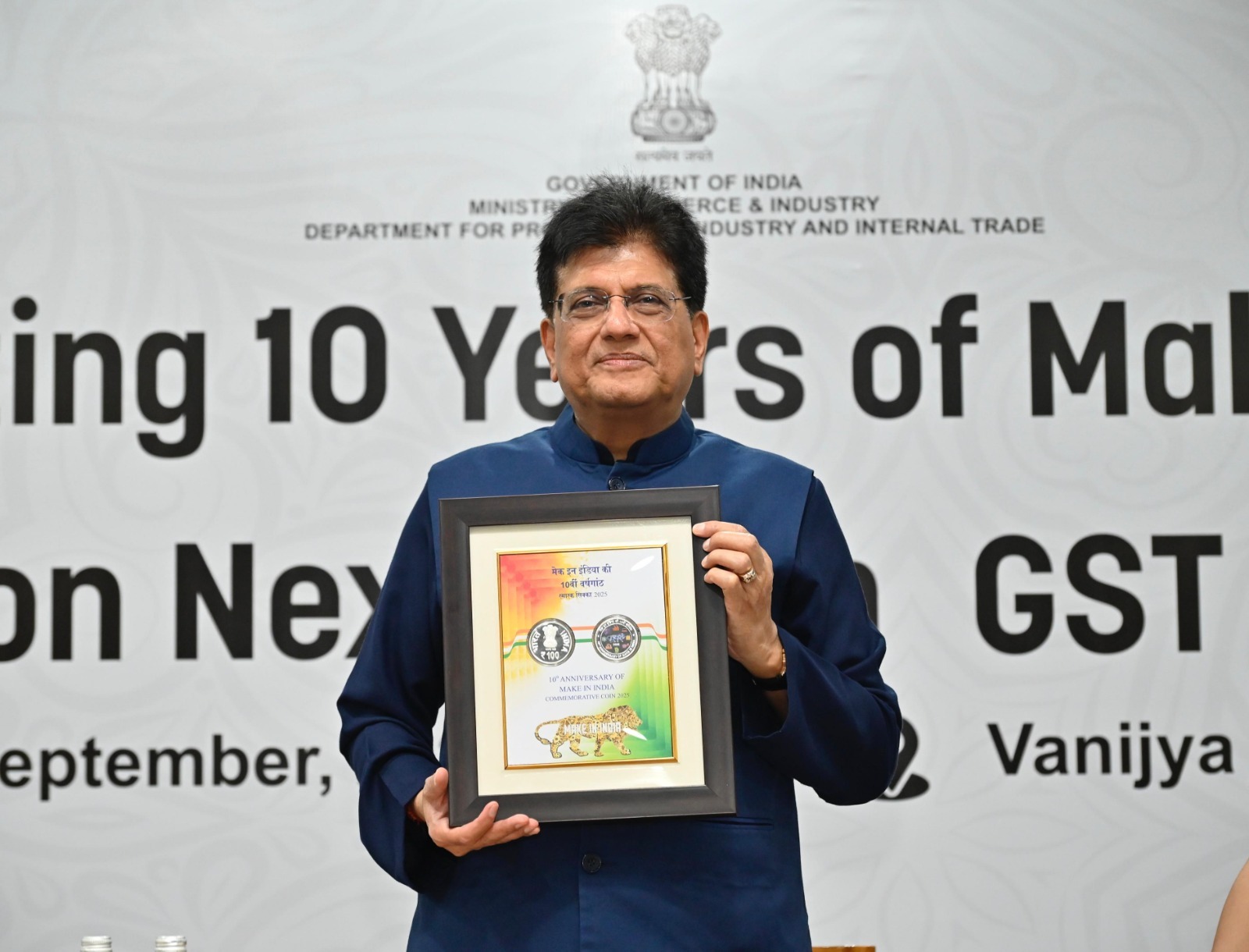
- 26 Sep 2025
In News:
- On the occasion of a decade of “Make in India”, the Union Minister of Commerce and Industry, Shri Piyush Goyal, launched the report on Assessment of Logistics Cost in India in September 2025.
- This marks the first scientifically derived national estimate of logistics costs, aligning with the objectives of the National Logistics Policy (NLP), 2022, to make India’s logistics sector globally competitive, data-driven, and cost-efficient.
About the Report
- Prepared by: Department for Promotion of Industry and Internal Trade (DPIIT) and the Department of Commerce.
- Methodology: Uses a hybrid approach, combining secondary data analysis with nationwide enterprise surveys to ensure scientific estimation.
- Objective: To establish a uniform national framework for measuring logistics costs and benchmarking them with global standards, in line with the NLP (2022).
Key Findings
- Logistics Cost Estimate (2025): Around 7.97% of India’s GDP.
- Previous Estimates: Older, often-cited figures of 13–14% of GDP were based on partial or external datasets, leading to inconsistent policy assessments.
- Trend Analysis: Over the past five years, logistics cost growth has slowed relative to non-services output, indicating improved sectoral efficiency.
Significance
This assessment provides evidence-based guidance for:
- Policy formulation on logistics modernization.
- Competitiveness enhancement of Indian exports.
- Strategic inputs for Free Trade Agreement (FTA) negotiations through the mapping of HSN codes to respective ministries.
- Development of logistics data banks and state logistics plans under the SMILE Programme (with ADB support).
Achievements and Improvements in India’s Logistics Sector
- Improved Global Ranking:India ranked 38th out of 139 countries in the 2023 World Bank Logistics Performance Index (LPI), up by six positions from 2018.
- Infrastructure Expansion:
- Cargo through Inland Waterways (2024–25):145.5 million tonnes.
- Operational National Waterways: Increased from 24 to 29.
- Digital Integration:
- Unified Logistics Interface Platform (ULIP): Consolidates logistics data across ministries, recording over 100 crore API transactions (2025).
- Facilitates end-to-end visibility and efficiency in multimodal logistics.
- Human Resource Development:Gati Shakti Vishwavidyalaya (GSV): India’s first logistics-focused university, has signed 40 MoUs with industry and academia to develop skilled manpower for transport and supply chain sectors.
Key Government Initiatives Driving Efficiency
1. PM GatiShakti National Master Plan (2021)
- Integrates 57 ministries/departments and all States/UTs on a digital GIS platform.
- Enables coordinated infrastructure planning acrossroads, railways, ports, airports, and inland waterways.
2. Dedicated Freight Corridors (DFCs)
- Two major DFCs under development by Indian Railways to:
- Ease congestion on passenger routes.
- Reduce freight cost and transit time.
- Improve energy efficiency and modal balance.
3. Multi-Modal Logistics Parks (MMLPs)
- 35 strategic locations approved (e.g., Chennai, Bengaluru, Nagpur, Indore).
- Five parks expected to become operational by 2027, promoting multimodal transport and value-added logistics services.
4. Maritime Amrit Kaal Vision 2047
- Long-term blueprint aligned with Blue Economy principles.
- Focuses on shipbuilding, coastal tourism, port-led development, and maritime skill-building to position India as a global maritime hub.
5. Sustainability and Green Initiatives
- Freight GHG Calculator: Estimates and compares transportation emissions to support eco-friendly logistics decisions.
- Rail Green Points: Helps freight customers assess carbon savings when using rail instead of road transport.
Challenges in India’s Logistics Sector
- High Logistics Cost (Legacy Issue): Historically estimated at 13–14% of GDP—higher than global benchmarks (8–9%).
- Infrastructure Gaps: Deficiency in warehousing, cold chain, and last-mile connectivity.
- Overdependence on Road Transport: Causes congestion, higher costs, and carbon emissions.
- Limited Multimodal Integration: Underutilization of railways and inland waterways for freight.
- Environmental Impact: Diesel-based trucking remains a major source of logistics-related emissions.
Objectives of the National Logistics Policy (NLP) 2022
- Reduce logistics cost to below 10% of GDP.
- Improve India’s LPI ranking to Top 25 by 2030.
- Build a robust, data-driven logistics decision-support system.
- Promote multimodal connectivity, sustainability, and ease of doing business.
Way Forward
- Integrated Infrastructure: Expansion of GatiShakti corridors and MMLPs to enable seamless multimodal movement.
- Digital Logistics Ecosystem: Wider adoption of ULIP, AI-driven route optimization, and e-logistics tracking.
- Green Logistics: Shift towards rail and waterways, adoption of electric and LNG-based freight vehicles, and GHG monitoring tools.
- Skill Development: Strengthening logistics education via GSV and industrial-academic partnerships.
- Policy Consistency: Periodic, data-backed cost assessments to guide long-term logistics and trade policy decisions.
Super Typhoon Ragasa
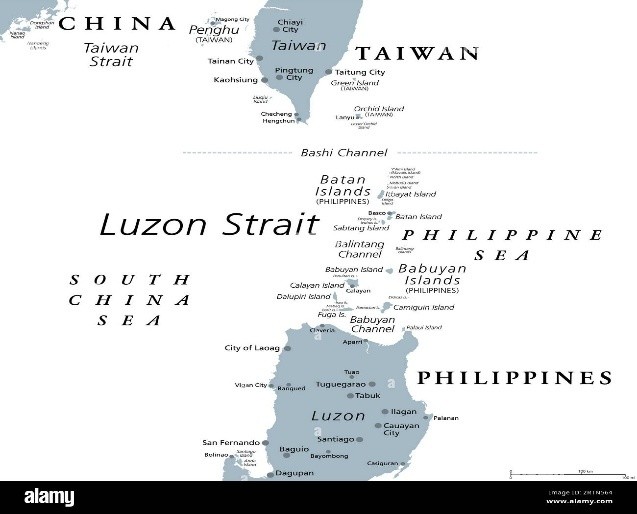
- 26 Sep 2025
In News:
Super Typhoon Ragasa—locally known as Nando—has emerged as one of the most powerful storms to strike Southeast Asia in recent years. With sustained winds exceeding 200 km/h and gusts up to 250 km/h, it has prompted large-scale shutdowns across the Philippines and Hong Kong, highlighting the region’s vulnerability to climate-induced extreme weather events.
About Super Typhoon Ragasa
- Category: 5 (the highest on the Saffir-Simpson scale)
- Wind Speed: Sustained winds of around 205 km/h, gusting up to 250 km/h.
- Origin: Formed over the western Pacific Ocean, where warm sea surface temperatures and low wind shear facilitated rapid intensification.
- Track: Moving northwestward across the Luzon Strait, impacting the Babuyan Islands in northern Philippines before heading toward southern China, including Hong Kong.
Regional and Environmental Significance
- The increasing intensity of storms like Ragasa reflects the broader pattern of climate change-driven extreme weather in the western Pacific region.
- Rising sea surface temperatures and shifting atmospheric circulation patterns have led to more frequent and severe typhoons, posing long-term challenges to disaster preparedness and coastal infrastructure resilience in densely populated regions like Luzon and Hong Kong.
Way Forward
- Strengthening Early Warning Systems: Enhanced forecasting and community-based alert dissemination can save lives in coastal and island regions.
- Climate Adaptation Infrastructure: Investment in storm-resilient housing, flood barriers, and sustainable urban planning is critical for mitigating recurring damage.
- Regional Cooperation: Shared meteorological data and coordinated disaster response among ASEAN nations, China, and Pacific island states can improve resilience.
Supercomputers vs Normal Computers
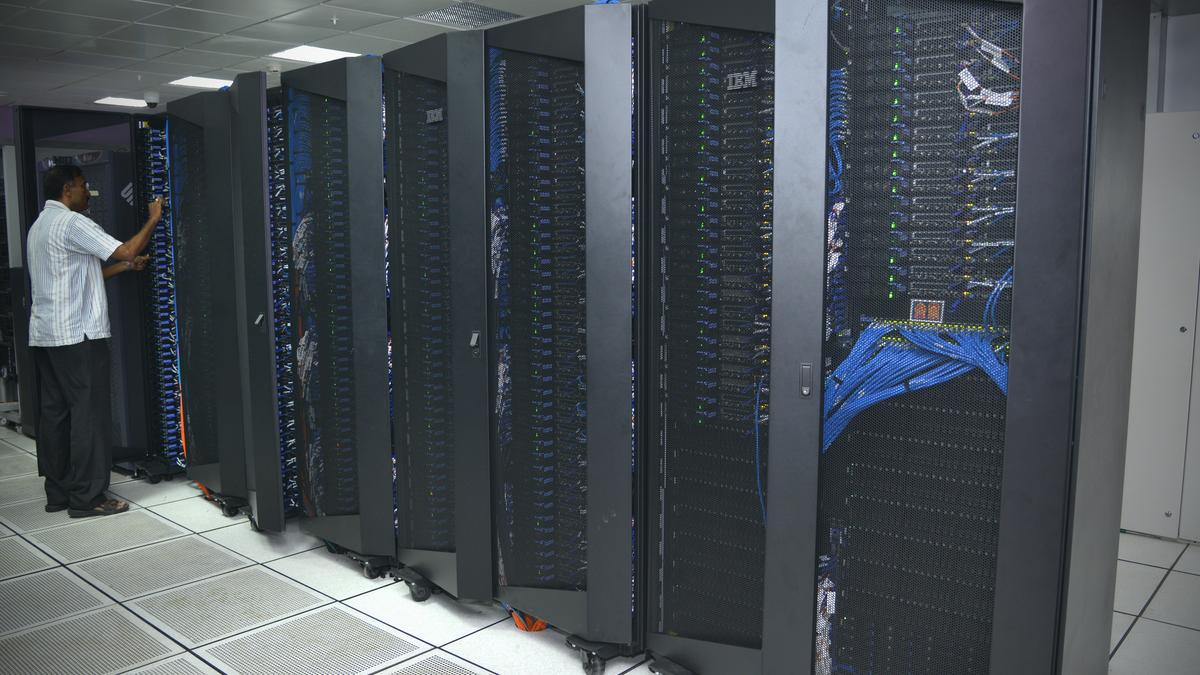
- 26 Sep 2025
In News:
Supercomputers are the giants of the computing world, built to solve problems far beyond the reach of everyday computers. Unlike normal laptops or desktops, which are designed for routine tasks like web browsing, office work, gaming, or media consumption, supercomputers tackle extremely complex, data-intensive problems—such as weather forecasting, simulating nuclear reactions, modelling the early universe, or training advanced artificial intelligence models.
Key Differences Between Normal Computers and Supercomputers
|
Aspect |
Normal Computers |
Supercomputers |
|
Processing Power |
Billions of operations per second (GFLOPS) |
Quintillions per second (ExaFLOPS); can complete tasks that would take ordinary machines years in just hours |
|
Architecture |
1–16 CPU cores |
Thousands to millions of CPUs and GPUs working in parallel |
|
Memory & Storage |
GB–TB range |
Petabyte-scale storage with parallel file systems |
|
Networking |
Standard Ethernet or Wi-Fi |
Ultra-fast interconnects like InfiniBand or Omni-Path |
|
Cooling & Power |
Small fans, low power consumption |
Liquid or immersion cooling; power requirements comparable to a small town |
|
Use & Access |
Direct individual use |
Remote access via job schedulers for research institutions and industrial applications |
India’s Supercomputing Initiative
- India’s journey in high-performance computing began in the late 1980s, largely as a response to export restrictions from Western countries. This led to the development of indigenous supercomputing capabilities under the National Supercomputing Mission (NSM).
- The mission has given rise to the PARAM series and the newer AIRAWAT supercomputers, positioning India on the global high-performance computing map.
- These systems are designed not just for academic research but also for solving real-world problems in climate modelling, healthcare simulations, and energy research. They exemplify India’s strategic approach to technological self-reliance and digital sovereignty.
Global Supercomputing Race
- Supercomputing has become a key area of technological competition. In Europe, Germany recently commissioned JUPITER, the continent’s first exascale supercomputer, capable of performing more than an exaFLOP (a quintillion calculation per second). This milestone highlights the global drive toward faster, more energy-efficient, and scalable computing infrastructures, with countries investing heavily in next-generation architectures.
Significance for India
For India, supercomputers are not only tools for scientific advancement but also instruments of national development. They support critical sectors such as meteorology, disaster management, nuclear research, and artificial intelligence, enhancing both strategic and developmental capacities. The NSM’s growing network of high-performance machines demonstrates India’s commitment to bridging the technological gap with global leaders.
Evo AI Model
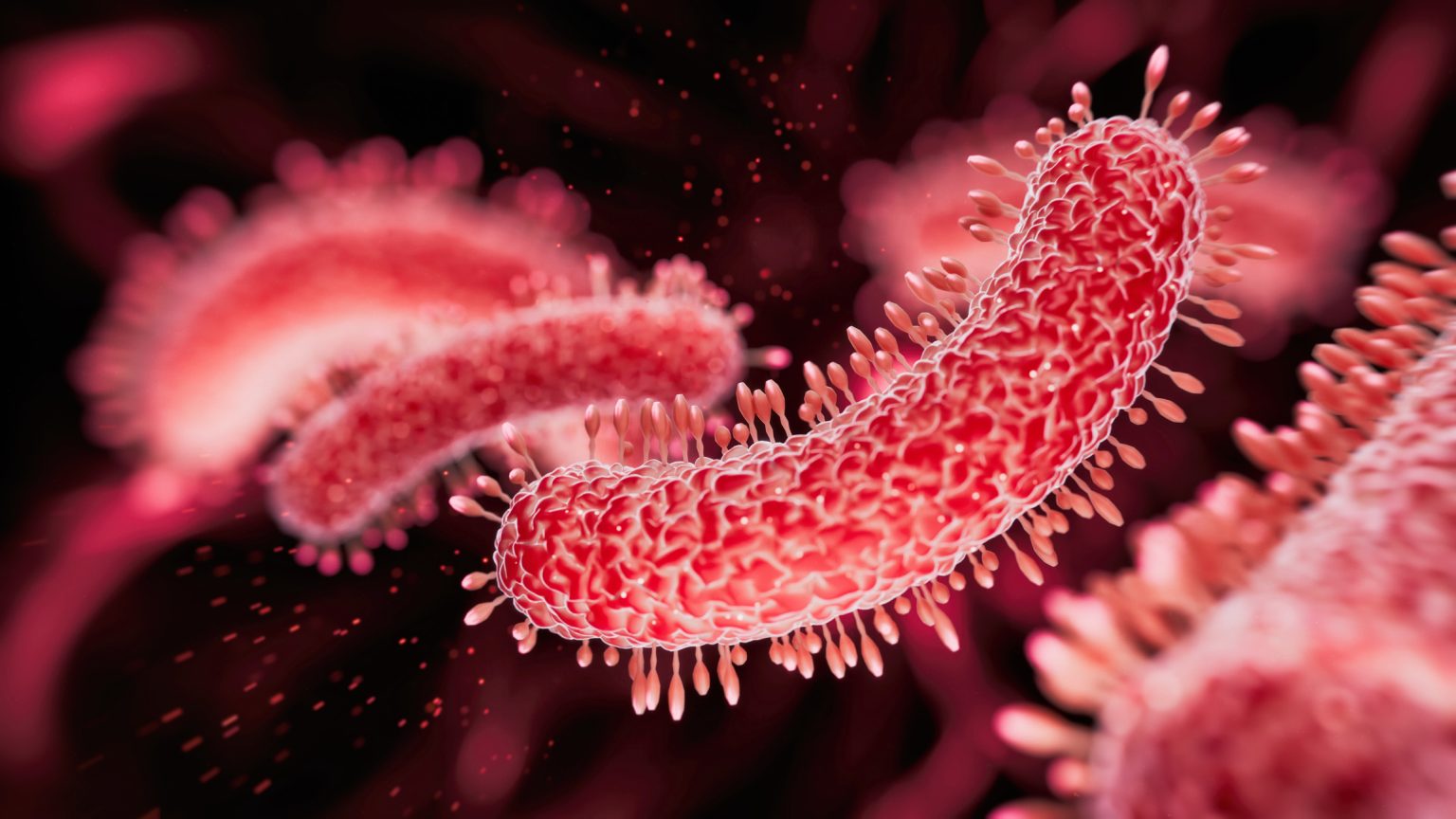
- 25 Sep 2025
In News:
- In a groundbreaking scientific development, researchers at Stanford University, in collaboration with the Arc Institute, have used artificial intelligence (AI) to design viruses capable of killing harmful bacteria.
- This breakthrough offers a potential solution to the global antibiotic resistance crisis and marks a significant advance in AI-guided synthetic biology.
The Challenge of Antibiotic Resistance
- Antimicrobial resistance (AMR) is a growing global health threat. According to the World Health Organization (WHO), AMR is among the top public health and development challenges, contributing to an estimated 1.27 million deaths globally in 2019 and playing a role in 4.95 million deaths.
- In India alone, around 6 lakh lives are lost annually due to drug-resistant infections. Traditional antibiotics are increasingly ineffective, necessitating novel approaches to combat bacterial diseases.
- Bacteriophages, or viruses that specifically target bacteria, provide a promising alternative. Unlike antibiotics, phages attack specific bacterial strains, sparing beneficial microbes. However, engineering or identifying effective phages has historically been slow and labor-intensive.
AI Breakthrough: The Evo Model
To accelerate this process, scientists developed Evo, a large AI model for genomics, described as a “ChatGPT for DNA”. Evo was trained on 80,000 microbial genomes and millions of bacteriophage and plasmid sequences, encompassingapproximately 300 billion nucleotides.
Key Features of Evo:
- Foundation Model for Genomics: Predicts, designs, and generates genetic code for synthetic biology applications.
- Generative Capability: Creates novel viral blueprints, synthetic genomes, and protein variants (e.g., Cas9 variants).
- Extended Context Length: Understands long DNA sequences and gene interactions.
- High Precision: Operates at nucleotide-level resolution.
- Accelerated R&D: Reduces decades of trial-and-error lab work to weeks.
- Open Research: Publicly available for non-commercial academic use.
How the AI-Designed Viruses Were Created
- Selection of Model Virus: Scientists chose phiX174, a simple virus infecting E. coli, due to its well-characterized genome (11 genes) and manageable complexity.
- AI Training: Evo analyzed millions of viral sequences, learning gene structures and functional combinations that could enhance antibacterial activity.
- Generative Design: The AI proposed hundreds of new virus variants predicted to attack bacteria effectively.
- Laboratory Synthesis: Researchers synthesized the AI-designed genomes and tested them in the lab. 16 new viruses successfully infected and destroyed bacteria, with some performing better than natural counterparts.
Significance of the Discovery
- Rapid Innovation: AI accelerates phage design, shrinking decades of research into weeks.
- Targeted Therapy: Offers precision treatments against drug-resistant bacterial infections.
- Agricultural and Clinical Applications: Potential to safeguard human health, hospitals, and food production from bacterial threats.
- Scientific Implications: Raises philosophical and biological questions about AI’s ability to create life-like entities, as viruses, while not strictly “alive,” mimic key life processes.
Safety and Ethical Considerations
Experts caution that AI-designed viruses, if misused or released unintentionally, could pose biosecurity risks. While engineering harmful human viruses is highly complex, the possibility of accidental creation of dangerous pathogens calls for strict safety protocols, oversight, and ethical guidelines. Responsible research is essential to ensure societal benefit while minimizing risk.
Logistics Ease Across Different States (LEADS) 2025
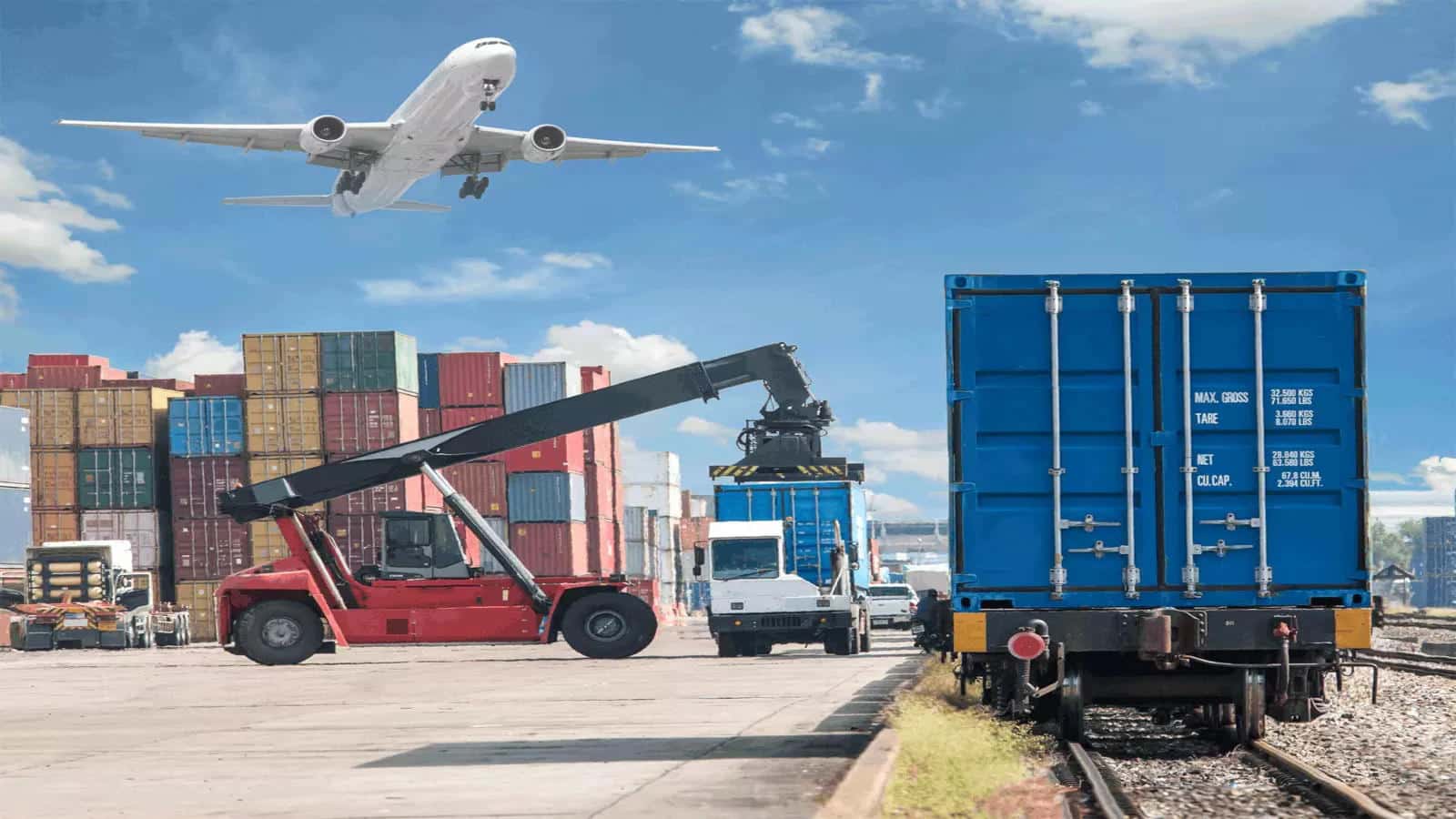
- 25 Sep 2025
In News:
The Union Minister for Commerce and Industry, launched Logistics Ease Across Different States (LEADS) 2025 in New Delhi as part of the decade-long celebrations of the Make in India initiative. The launch marks a major step in India’s efforts to create a globally competitive, efficient, and sustainable logisticsecosystem, integral to achieving the goals of Atmanirbhar Bharat and Viksit Bharat 2047.
About LEADS 2025
- Logistics Ease Across Different States (LEADS) is a national index and survey developed by the Department for Promotion of Industry and Internal Trade (DPIIT) under the Ministry of Commerce and Industry.
- It aims to benchmark and rank the logistics performance of Indian States and Union Territories, providing actionable insights to improve supply chain efficiency and reduce logistics costs.
Objectives
- To evaluate and compare logistics performance across States and UTs.
- To identify best practices and policy gaps for targeted reforms.
- To guide infrastructure planning and capacity building for logistics improvement.
- To support Make in India by enhancing logistics competitiveness and reducing costs.
Key Features of LEADS 2025
- Corridor Performance Tracking
- Assessment of 5–7 key national logistics corridors based on journey time, truck speed, and waiting periods.
- Provides a data-driven evaluation of corridor efficiency.
- API-Enabled Real-Time Data
- Introduces API-based analytics to evaluate section-wise speeds on major road corridors.
- Offers sharper insights into congestion points and logistics bottlenecks.
- State Rankings &Categorisation: States and UTs are ranked under Leaders, Achievers, and Aspirers categories to encourage healthy competition and policy innovation.
- Digital Dashboard: A new interactive monitoring platform allows States and UTs to track performance and progress in real time.
- Policy Recommendations: The survey provides customised state-level action plans to address infrastructure, service, and regulatory gaps.
Assessment Parameters
LEADS evaluates States and UTs on five major dimensions:
- Infrastructure Quality – Roads, warehousing, multimodal connectivity.
- Service Quality – Availability, reliability, and performance of logistics providers.
- Efficiency – Timeliness, truck turnaround time, and ease of clearances.
- Policy and Regulatory Support – State-level facilitation measures and grievance redressal mechanisms.
- Stakeholder Perception – Industry feedback on cost, speed, and reliability of logistics operations.
Papikonda National Park
- 25 Sep 2025
In News:
A recent study published in the Records of the Zoological Survey of India has documented 51 species of herpetofauna — including amphibians and reptiles — in Papikonda National Park, located in the northern part of the Eastern Ghats, Andhra Pradesh. This comprehensive survey marks a significant step in understanding the region’s biodiversity, which has remained largely underexplored.
Key Findings of the Study
Researchers recorded 18 amphibians, 21 lizards, 10 snakes, and 2 turtles through extensive fieldwork conducted between September 2021 and February 2023. The study revealed three species — Minervaryakalinga, Sphaerothecamaskeyi, and Hemidactylus kangerensis — reported for the first time in Andhra Pradesh.
According to the IUCN Red List (2024):
- 46 species are listed as Least Concern,
- 3 species are Not Yet Assessed,
- Hemidactylus kangerensis is Endangered, and
- Lissemyspunctata is Vulnerable.
Under the Wildlife (Protection) Act, 2022, several species enjoy legal protection:
- Schedule I:Chamaeleozeylanicus, Calodactylodes aureus, Pangshura tentoria, Lissemyspunctata
- Schedule II:Hoplobatrachustigerinus, Euphlyctiscyanophlyctis
The study also highlighted rare species such as Psammodynastespulverulentus and Argyrophisdiardii, the latter recorded for the first time in the Eastern Ghats. Two Eastern Ghats endemics — the Indian golden gecko (Calodactylodes aureus) and Dutta’s Mahendragiri gecko (Hemidactylus sushilduttai) — were also documented.
About Papikonda National Park
- Location: East and West Godavari districts, Andhra Pradesh
- Area: Approximately 1,012.86 sq km
- Established: Declared a Reserved Forest (1882), Wildlife Sanctuary (1978), and upgraded to National Park (2008)
- Landscape: Rugged terrain of the Eastern Ghats, divided by the Godavari River, with elevation ranging from 20–850 metres
- Geographical Features: Contains 62 named mountains, including Devara Konda (highest point) and Verala Konda (most prominent peak)
- Recognition: Identified as an Important Bird and Biodiversity Area (IBA) by BirdLife International
Flora and Fauna
- Vegetation: Tropical moist deciduous, semi-evergreen, and dry deciduous forests.
- Flora: Teak, rosewood, sandalwood, bamboo, sal, mahua, pterocarpus, terminalia, cassia, and eucalyptus.
- Fauna: Bengal tiger, Indian leopard, sloth bear, dhole (wild dog), sambar, and spotted deer.
- Unique Feature: Home to the “KanchuMekha”, a rare dwarf goat breed native to the region.
Conservation Significance
- The study provides baseline data crucial for biodiversity conservation and monitoring in the Eastern Ghats. Researchers warned that herpetofaunal populations face multiple threats — including habitat loss, fragmentation, emerging diseases, and climate change.
- Rare and threatened species like the Jeypore Hill Gecko (Geckoellajeyporensis), Barkud Spotted Skink (Barkudiainsularis), and King Cobra (Ophiophagus hannah) emphasize the need for targeted conservation strategies.
- The authors advocated for systematic surveys and integrated taxonomic approaches across the Eastern Ghats to enhance understanding of species distribution and to strengthen regional conservation planning.
Exercise Amogh Fury
- 25 Sep 2025
In News:
The Indian Army’s Sapta Shakti Command recently conducted a major integrated firepower exercise, ‘Amogh Fury’, at the Mahajan Field Firing Ranges in Rajasthan’s Thar Desert. The large-scale drill showcased the Army’s growing emphasis on technology-driven warfare, jointness of combat arms, and preparedness for multi-domain operations.
Objectives and Significance
- The primary aim of Exercise Amogh Fury was to test combat power, coordination, and operational readiness under realistic battlefield conditions.
- The exercise simulated live battle scenarios, enabling forces to validate their capabilities in offensive and defensive operations, while ensuring seamless integration between ground and air platforms.
- The drill reflected the Army’s commitment to operational transformation in line with evolving security dynamics, focusing on rapid decision-making, situational awareness, and integrated command structures.
Key Features of the Exercise
The exercise featured coordinated manoeuvres involving:
- Battle Tanks and Infantry Combat Vehicles – for armoured and mechanised warfare.
- Attack Helicopters and Long-Range Artillery – providing precision firepower support.
- Drones and Unmanned Aerial Systems (UAS) – for real-time reconnaissance, surveillance, and target acquisition.
These diverse platforms operated in unison to demonstrate jointness between air and ground forces, vital for modern high-intensity conflicts.
Integration of Advanced Technologies
A central focus of Amogh Fury was the use of modern technologies such as:
- Network-centric communication systems
- Integrated Command-and-Control (C2) architecture
- Real-time surveillance and targeting systems
These advancements allowed for the creation of a unified operational picture, enhancing situational awareness, rapid coordination, and decision-making across command levels. The integration of these systems reflects the Army’s move toward digitised battlefield management and multi-domain warfare capability.
Training and Outcomes
The exercise provided pragmatic training for personnel across all ranks under realistic combat conditions. It served as a testbed for refining tactical procedures and assessing the synergy between combat arms, support units, and logistic elements.
Through Amogh Fury, the Indian Army strengthened its readiness to counter emerging threats, underscoring its focus on agility, precision, and technological superiority on the modern battlefield.
DadasahebPhalke Award for 2023
- 25 Sep 2025
In News:
In a major recognition of artistic excellence, the Government of India has announced that legendary actor, director, and producer Shri Mohanlal Viswanathan Nair will be conferred with the DadasahebPhalke Award for the year 2023, the highest honour in Indian cinema.
About the DadasahebPhalke Award
The DadasahebPhalke Award is India’s highest honour in the field of cinema, instituted in 1969 to commemorate the birth centenary of DadasahebPhalke, widely regarded as the Father of Indian Cinema.
- Inaugural Recipient: Devika Rani (1969)
- Presented by: The President of India
- Award Components: Swarna Kamal (Golden Lotus) medallion, a shawl, and a cash prize of ?10 lakh
- Purpose: To recognise individuals for their outstanding lifetime contribution to the growth and development of Indian cinema.
About DadasahebPhalke
Dhundiraj Govind Phalke (1870–1944), born in Trimbak, Maharashtra, was a painter, photographer, playwright, and filmmaker. He directed India’s first full-length feature film, Raja Harishchandra (1913), which laid the foundation for Indian cinema. His pioneering vision and creative ingenuity earned him the title of “Father of Indian Cinema.”
Significance
The conferment of the DadasahebPhalke Award on Mohanlal marks a momentous chapter in Indian cinematic history. It recognises not just his artistic brilliance but also his contribution in shaping Indian cinema as a powerful medium of cultural expression. His journey from Kerala to global acclaim embodies the spirit of Indian creativity and excellence celebrated through this prestigious award.
Fentanyl Blacklist
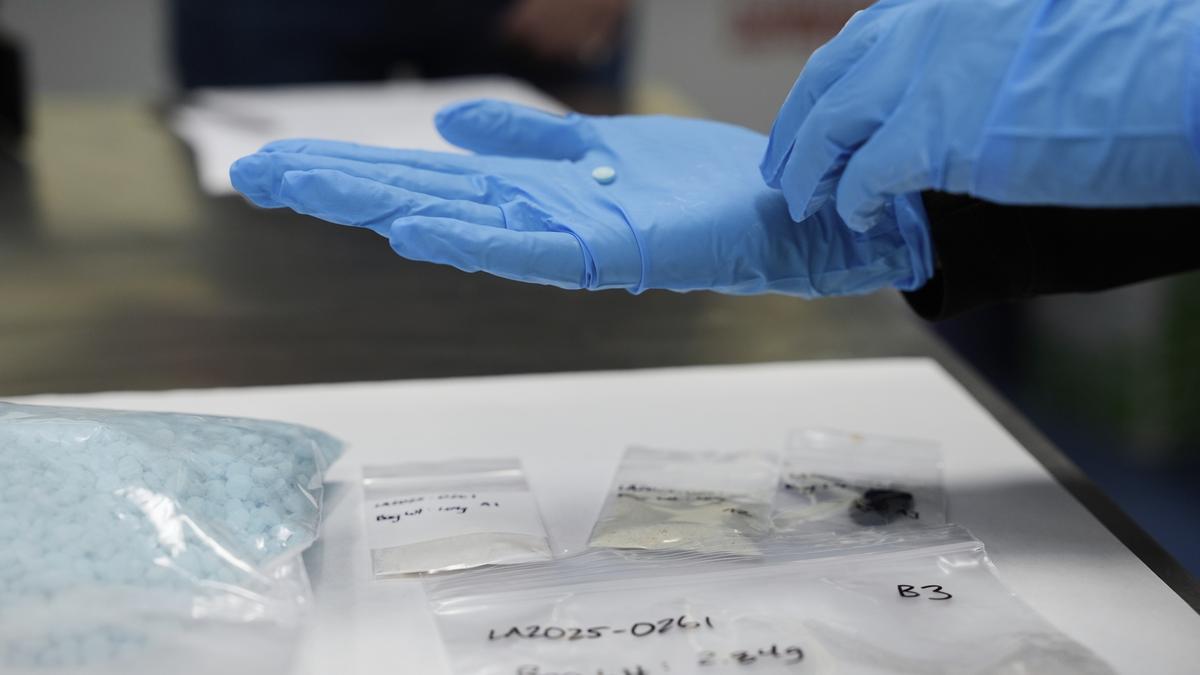
- 24 Sep 2025
In News:
The United States has intensified its global campaign against fentanyl, a powerful synthetic opioid responsible for tens of thousands of overdose deaths annually. In its latest narcotics control measures, the U.S. has imposed visa bans on Indian business executives allegedly linked to the trafficking of fentanyl precursor chemicals, reflecting growing scrutiny of global supply chains originating in Asia.
Background: The Major’s List and India’s Inclusion
- In the latest “Major’s List” submitted to the U.S. Congress, President Donald Trump identified 23 countries as major sources or transit hubs for illicit drugs — particularly fentanyl — posing a threat to American citizens.
- The list includes India, Pakistan, China, and Afghanistan, among others. While inclusion does not imply failure in counter-narcotics efforts, it highlights each nation’s role in the production or transit of controlled substances and precursor chemicals.
- Countries such as Afghanistan, Bolivia, Myanmar, Colombia, and Venezuela were categorized as having “failed demonstrably” to meet international drug-control obligations.
Understanding Fentanyl:
Fentanyl was first synthesized in the 1960s for legitimate medical use as a potent painkiller. However, illicitly manufactured variants now dominate the U.S. illegal drug market.
- It is 50 times stronger than heroin, and just 2 milligrams can be fatal, as it suppresses the brain’s respiratory centers.
- Between August 2023 and August 2024, more than 57,000 Americans died of opioid overdoses, primarily linked to fentanyl.
- In 2022, the U.S. Drug Enforcement Administration (DEA) seized enough fentanyl to deliver 379 million lethal doses—enough to kill the U.S. population.
The crisis has been termed the “opioid epidemic”, driving unprecedented public health and security responses in the U.S.
Fentanyl Precursors and the Challenge of Regulation
- Unlike plant-based drugs such as heroin or cocaine, fentanyl is lab-synthesized from chemical precursors like N-phenethyl-4-piperidone (NPP) and 4-anilino-N-phenethylpiperidine (4-ANPP).
- These compounds have legitimate pharmaceutical and industrial uses, complicating global regulatory oversight. Small quantities of these chemicals can yield large volumes of fentanyl, and they are easily concealed in international shipments through mislabelling or false customs declarations.
- This has made it difficult for authorities to distinguish between lawful trade and diversion into illicit production networks.
Global Fentanyl Supply Chain
The global fentanyl network involves multiple countries across different stages of production and distribution:
- China and India are key producers of precursor chemicals, some of which are diverted to illegal channels.
- Mexican cartels synthesize fentanyl using these precursors, convert it into powder or counterfeit pills, and smuggle it into the U.S. through the southwest border.
This multi-tiered chain, combined with e-commerce and courier systems, has created a complex and decentralized trafficking web, challenging traditional interdiction mechanisms.
U.S. Domestic and Global Enforcement Measures
Domestically, the U.S. has expanded DEA operations, seizures, and public health initiatives to counter the crisis:
- Nationwide naloxone distribution to reverse overdoses in emergencies.
- Public awareness campaigns warning of counterfeit prescription pills laced with fentanyl.
- Enhanced treatment and rehabilitation programs to curb addiction and demand.
Internationally, Washington has combined criminal prosecution, trade measures, and sanctions to curb the flow of fentanyl and its precursors.
- In February 2025, additional tariffs were imposed on imports from China, Canada, and Mexico to pressure stronger enforcement; these were later suspended for Canada and Mexico after improved border controls.
- The U.S. has also sought to align global chemical control frameworks through the UN and bilateral agreements.
India’s Position
India, while listed as a “major drug transit or producing country,” has not been accused of state complicity. The issue primarily involves private firms and individuals engaged in illicit chemical exports. Indian authorities are expected to strengthen precursor control mechanisms, enhance customs surveillance, and ensure regulatory compliance within the pharmaceutical and chemical industries.
The episode underscores India’s dual challenge — balancing its role as a legitimate pharmaceutical exporter while preventing misuse of chemical manufacturing capacity.
Semiconductor Designers Power India’s Chip Dreams
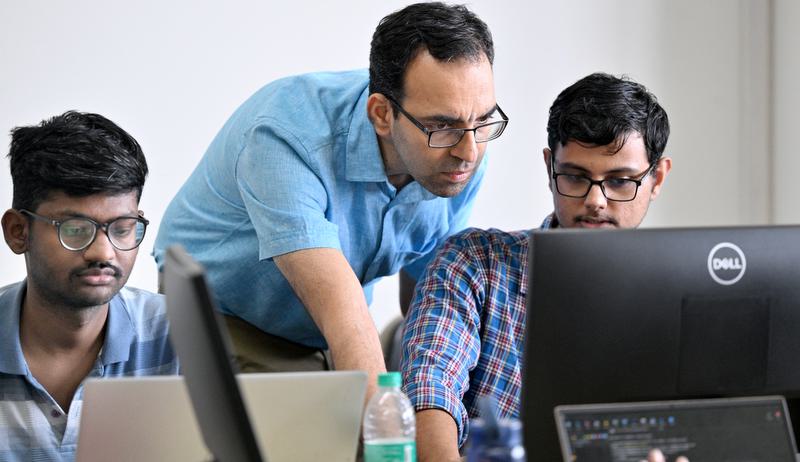
- 24 Sep 2025
In News:
India’s semiconductor ecosystem is witnessing a transformative shift — from being a consumer-driven electronics market to an emerging design and manufacturing hub. While the country’s large-scale semiconductor fabrication projects are still in early stages, the chip design sector is already thriving, positioning India as a critical player in the global semiconductor value chain.
Policy Framework: Semicon India Mission
The turning point came in 2021, when the Government of India launched the ?76,000 crore Semicon India Programme, aimed at developing India into a global hub for electronics design and manufacturing.
- Manufacturing Push:The mission provides 50% capital support for semiconductor fabrication (fab) and assembly, testing, marking, and packaging (ATMP/OSAT) facilities, with states adding 20–25% additional incentives.
- Ten major projects have been approved across Gujarat, Punjab, Uttar Pradesh, Odisha, Andhra Pradesh, and Assam.
- Notably, Micron’s ?22,500 crore ATMP facility in Gujarat is under construction and expected to begin operations in 2024.
- Design Support:The Design Linked Incentive (DLI) and Chips to Startup (C2S)programmes aim to nurture a new generation of semiconductor designers.
- The C2S initiative provides free access to high-end Electronic Design Automation (EDA) tools from Siemens, Cadence, and Synopsys, while targeting the training of 85,000 engineers in five years.
India’s Edge in Semiconductor Design
- India today accounts for 20% of the global semiconductor design workforce, hosting around 1.25 lakh chip designers who develop nearly 3,000 chips annually.
- Multinational firms like NVIDIA, Intel, AMD, and Qualcomm run large R&D operations from India, spread across Bengaluru, Hyderabad, Pune, and Noida.
- Even as the world faces a projected shortage of one million chip designers by 2030 (Deloitte), India’s deep talent pool offers a natural advantage.
- The country produces over 8 lakh engineering graduates annually, with around 5.7 lakh enrolled in electronics and related disciplines (2021–22).
Academia–Industry Collaboration: Bridging the Gap
- Despite government efforts, experts underline a persistent disconnect between academia and industry. Indian industries invest only 0.4% of profits in academic R&D, compared to 5–6% in the U.S. and South Korea.
- Strengthening collaboration — through joint research, funded Ph.D. programs, and internship pipelines — is essential to make graduates industry-ready and sustain innovation.
- Institutions like IITs, IISc, and IIITs have begun partnerships with leading toolmakers such as Synopsys, Lam Research, and Cadence to enable frontier-level projects at sub-10 nanometer design nodes.
Economic and Strategic Implications
- High-Value Employment: Semiconductor jobs have a multiplier effect of 6.7, driving indirect employment in allied sectors.
- Export Potential: Electronics exports are projected to quintuple by 2026, narrowing India’s trade deficit.
- Strategic Autonomy: Domestic chip capacity reduces dependence on foreign suppliers, vital for defence, telecom, and automotive sectors.
- Innovation Push: With rising patent filings and homegrown IP, India is consolidating its role in the global tech value chain.
Red-Necked Phalarope
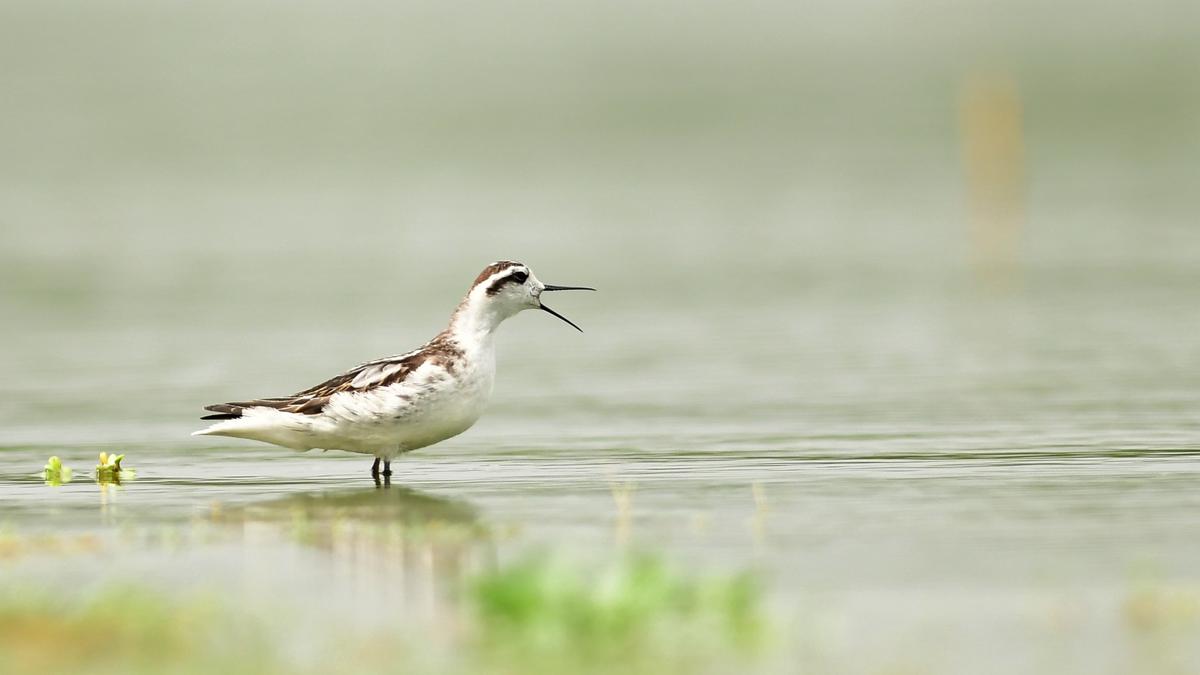
- 24 Sep 2025
In News:
In a notable development for ornithology and biodiversity conservation, the Red-necked Phalarope (Phalaropuslobatus), a rare migratory shorebird, has been sighted for the first time at the Nanjarayan Bird Sanctuary near Tiruppur, Tamil Nadu.
About the Red-Necked Phalarope
The Red-necked Phalarope is a small, migratory wader renowned for its unique feeding behavior and striking breeding plumage.
- Distinctive Feeding Behavior:It is known for its characteristic habit of spinning rapidly in circles on the water surface to stir up small invertebrates and plankton, which it then feeds upon.
- Physical Features:During the breeding season, the bird exhibits chestnut-red plumage extending from behind the ear to the sides of the neck — a feature that gives it its name.
Unusually among birds, the female is more brightly coloured than the male, and the species displays polyandrous behaviour (females mate with multiple males), with males incubating the eggs and caring for the chicks.
Distribution and Habitat
The Red-necked Phalarope has a circumpolar distribution, breeding in boreal and tundra zones between 60° and 70° latitude, across regions such as the Arctic coasts, Aleutian Islands, and northern Britain.
- During migration and the non-breeding season, it spends much of its time at sea, especially across:
- The Arabian Sea,
- Waters off central-west South America, and
- The central Indonesian to western Melanesian regions.
The recent sighting at Nanjarayan Bird Sanctuary — a vital inland wetland ecosystem — highlights the site’s growing importance as a stopover for migratory shorebirds along the Central Asian Flyway.
Conservation Status
- IUCN Red List:Least Concern
Despite being widespread globally, localized population declines have been observed due to habitat degradation, pollution, and climate-induced changes in migratory routes.
‘One-In, One-Out’ Migration Scheme
- 24 Sep 2025
In News:
- An Indian national has become the first person to be deported from the United Kingdom to France under the newly launched “one-in, one-out” migration scheme, part of the UK–France Returns Treaty.
- The deportation marks the beginning of a new bilateral arrangement aimed at curbing illegal cross-Channel migration and dismantling human smuggling networks operating between the two countries.
Background and Context
- The deported individual reportedly arrived in the UK illegally via the English Channel in early August 2025 aboard a small boat — one of the most common routes used by irregular migrants. He was subsequently detained and later flown from Heathrow to Paris on an Air France flight, under the provisions of the UK–France returns framework.
- The UK Home Office confirmed that upon arrival in France, the individual would be offered a voluntary, paid-for return to his home country. If he declines, he could face enforced deportation.
- The deportation comes amid a broader crackdown on illegal immigration in the UK, with reports indicating a sharp rise in Indian nationals detained in British immigration centres in recent months.
About the ‘One-In, One-Out’ Scheme
The “one-in, one-out” scheme is a bilateral deportation and migration management arrangement between the United Kingdom and France.
- Objective: To deter illegal small-boat crossings across the English Channel and disrupt human trafficking networks.
- Mechanism: For every illegal migrant returned by the UK to France, the UK will accept one legal asylum seeker from France — hence the name “one-in, one-out.”
- Implementation Period:August 2025 to June 2026, operating as a pilot programme subject to review.
- Provisions:
- Fast-track deportations for illegal entrants.
- Voluntary return option with financial assistance for deported migrants.
- Judicial oversight allowing courts to review last-minute appeals swiftly.
Significance of the Agreement
- Border Security: Strengthens the UK’s capacity to manage and deter illegal migration.
- International Cooperation: Demonstrates growing cross-border coordination between the UK and France on migration governance.
- Policy Shift: Reflects a move towards reciprocal responsibility in handling irregular migration.
- Political Impact: Reinforces the UK government’s tough stance on illegal immigration while maintaining humanitarian commitments.
Androth Anti-Submarine Warfare Ship
- 24 Sep 2025
In News:
- The Indian Navy has commissioned INS Androth, an indigenously built Anti-Submarine Warfare Shallow Water Craft (ASW-SWC), marking a significant milestone in strengthening India’s maritime security and self-reliance in defence production.
- Built by Garden Reach Shipbuilders & Engineers (GRSE), Kolkata, INS Androth is the second vessel in a series of eight ASW-SWCs being developed for the Navy.
Strategic Significance
- Named after Androth Island in the Lakshadweep archipelago, the ship’s designation underscores India’s commitment to safeguarding its maritime frontiers in the Arabian Sea and ensuring the security of critical sea lanes around the island territories.
- The induction comes at a time of growing Chinese naval presence in the Indian Ocean Region (IOR), adding a crucial layer of deterrence and surveillance to India’s coastal defence network.
Design and Capabilities
- INS Androth is designed for anti-submarine operations in shallow waters, coastal security patrols, and escort missions.
- It is 77 metres long and powered by diesel engine–waterjet propulsion, providing superior maneuverability in littoral and near-shore environments.
- Key onboard systems include:
- Advanced indigenous sonar and sensor suites for submarine detection and tracking.
- Lightweight torpedoes and ASW rockets for engaging underwater threats.
- 80% indigenous components, aligning with the ‘Aatmanirbhar Bharat’ initiative to reduce import dependence in defence production.
Operational Role
- The ship will primarily operate along India’s western seaboard, particularly around Lakshadweep, where it will conduct surveillance and deterrence missions against sub-surface threats.
- Its shallow-water design allows it to access areas that larger vessels cannot, enhancing the Navy’s reach in coastal and island territories.
India Re-elected to the Universal Postal Union’s Governing Bodies
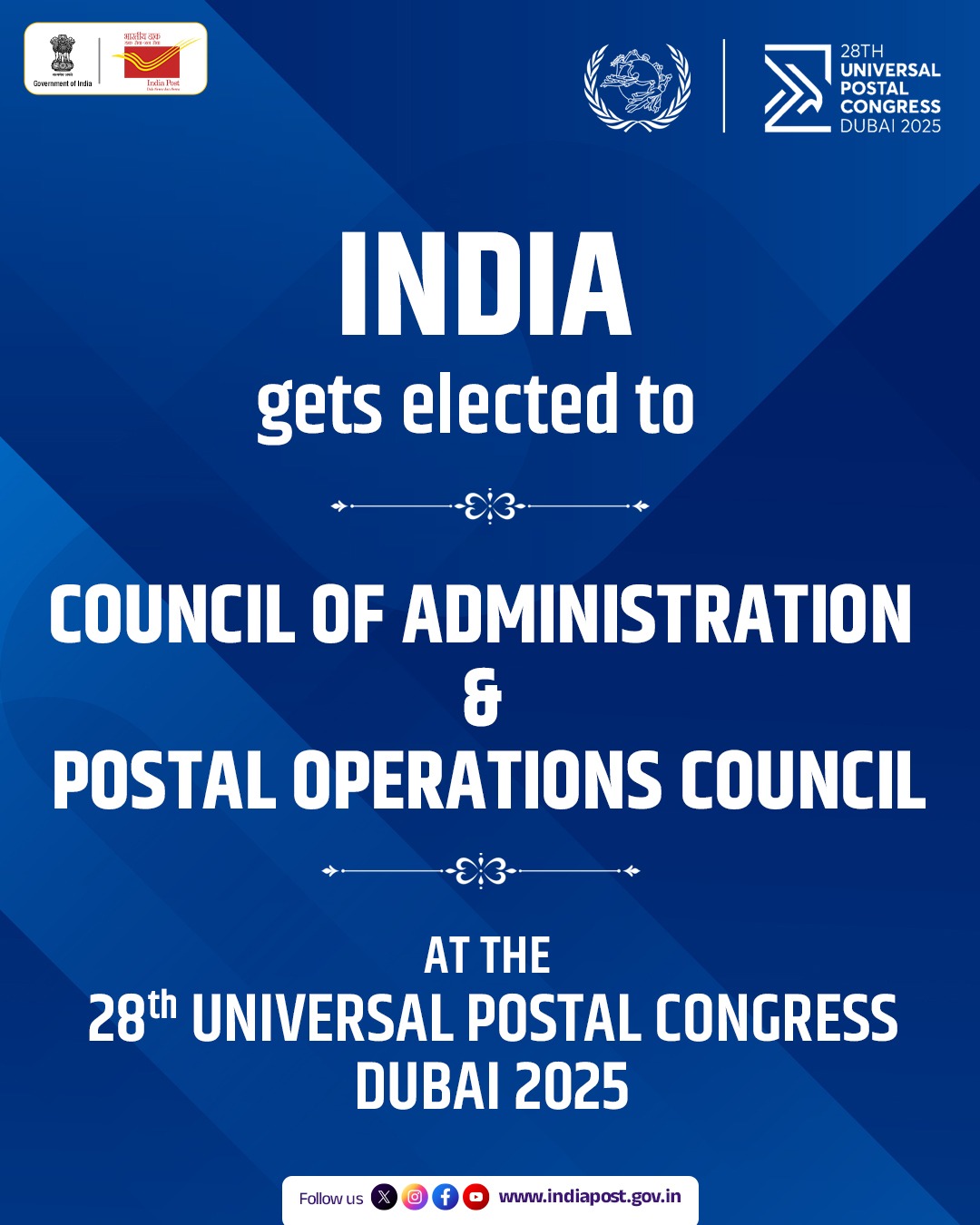
- 23 Sep 2025
In News:
- India has been re-elected to the Council of Administration (CA) and the Postal Operations Council (POC) of the Universal Postal Union (UPU) during the 28th Universal Postal Congress held in Dubai.
- This re-election reaffirms global confidence in India Post’s leadership, digital reforms, and commitment to inclusive postal development, strengthening India’s voice in shaping international postal governance.
About the Universal Postal Union (UPU)
- Founded: 1874 under the Treaty of Bern
- Headquarters: Berne, Switzerland
- Members: 192 countries
- Status: A specialized agency of the United Nations, it is the second-oldest international organization after the International Telecommunication Union (ITU).
Mandate and Objectives
- To promote global postal cooperation and ensure universal connectivity in mail and parcel delivery.
- To establish standards, regulations, and tariffs for international postal exchanges.
- To enhance efficiency, affordability, and reliability of postal services globally.
- To facilitate the growth of e-commerce and cross-border logistics through modern postal systems.
Governance Structure of UPU
The UPU functions through four key organs:
- Congress:
- The supreme decision-making body, convened every four years.
- Sets the long-term strategy, budget, and policy framework for global postal operations.
- Council of Administration (CA):
- Handles policy, legal, administrative, and regulatory issues between Congress sessions.
- Oversees the implementation of Congress decisions and coordinates global postal governance.
- Postal Operations Council (POC):
- The technical and operational body comprising 48 elected member countries.
- Works on service innovation, quality enhancement, digital integration, and modernisation of global postal systems.
- International Bureau:
- The secretariat of the UPU providing logistical, analytical, and technical support to member states and councils.
Significance of India’s Re-election
- Endorsement of Leadership: India’s re-election underscores the international community’s trust in its postal transformation, particularly in digital and financial inclusion.
- Modernisation Initiatives: India Post’s progress in e-commerce facilitation, postal banking, logistics efficiency, and technology-driven governance has positioned it as a model for developing nations.
- Strategic Representation: Through its roles in both CA and POC, India can influence policy formulation, standard setting, and capacity-building initiatives within the UPU.
- Global Collaboration: Reinforces India’s vision of “One World, One Postal Network”, aligning with its broader digital diplomacy and South-South cooperation goals.
India and the UPU: A Historical Perspective
- India joined the UPU in 1876, just two years after its establishment.
- Over the decades, it has played a constructive role in strengthening postal connectivity across the Global South.
- Under the leadership of the Ministry of Communications, India Post has transitioned from traditional mail delivery to offering digital, financial, and logistical services, supporting Digital India and Atmanirbhar Bharat missions.
Trump Imposes $100,000 Fee On H-1B Visas
- 23 Sep 2025
In News:
- In a significant policy shift, U.S. President Donald Trump signed a proclamation in October 2025 introducing a $100,000 (≈ ?88 lakh) sponsorship fee for H-1B visas, dramatically raising the cost for U.S. companies hiring foreign skilled workers.
- The move, presented as a measure to “protect American jobs,” marks one of the most stringent immigration-related economic policies in recent years and has wide-ranging implications for India’s IT sector, which remains the largest user of H-1B visas.
About the Policy
- New Regulation: U.S. employers sponsoring an H-1B worker must now pay a non-refundable fee of $100,000 per application, a steep increase from the earlier few-thousand-dollar processing cost.
- Official Objective: To ensure that only “highly skilled, non-substitutable” professionals are brought into the U.S., while deterring misuse of the program by firms replacing American workers with cheaper foreign labour.
- Rationale: According to the U.S. administration, the H-1B system is one of the most abused visa categories, often exploited by outsourcing companies to fill mid-level tech roles at lower wages.
Understanding the H-1B Visa
The H-1B is a non-immigrant U.S. work visa that allows companies to hire foreign professionals in specialty occupations requiring technical or theoretical expertise—mainly in STEM, finance, healthcare, and IT sectors.
- Introduced: Under the Immigration Act of 1990
- Eligibility: Bachelor’s degree or equivalent in a relevant field
- Tenure: Valid for 3 years, extendable up to 6 years (and beyond if Green Card process is ongoing)
- Quota: 65,000 general visas + 20,000 reserved for advanced U.S. degree holders
- Equal Pay Mandate: Employers must offer wages comparable to those of American workers to prevent labour exploitation
Applications are processed through the USCIS lottery system, which randomly selects qualified candidates.
Impact on India
1. Economic & Corporate Impact
- Cost Escalation: Indian IT majors like TCS, Infosys, and Wipro, which collectively sponsor thousands of H-1B employees annually, will face a steep rise in operational expenses.
- Reduced Hiring Abroad: Companies may shift high-skill operations back to India or relocate nearshore to countries such as Canada or Mexico to avoid the inflated cost.
- Automation Drive: Higher labour costs may accelerate automation and AI adoption within U.S. operations, reducing dependence on human capital from abroad.
2. Workforce & Migration Implications
- Major Beneficiaries Affected: Indians account for nearly 71% of all H-1B approvals, followed by China (≈12%).
- Extended Burden: Since most Indian professionals renew their H-1B multiple times due to the 10–15 year Green Card backlog, the cumulative cost will be enormous.
- Talent Diversion: The measure could divert Indian talent toward Canada, the EU, or Australia, which have relatively liberal skilled-migration policies.
‘Gold Card’ Visa Scheme
Alongside the H-1B fee hike, Trump announced a ‘Gold Card Visa Program’:
- Entry Fee: $1 million for individuals and $2 million for businesses.
- Objective: To attract “extraordinary individuals” capable of creating jobs and investments in the U.S. economy.
- Economic Rationale: The administration projects billions in revenue from the program to help reduce public debt and taxes.
- Selective Entry Policy: The move signals a shift from a skill-based to a wealth-based migration system, prioritizing elite entrepreneurs and investors over mid-level professionals.
Broader Policy Context
- The Trump administration has revived tougher citizenship tests, reinstating a 128-question civics and history exam (scrapped by the Biden government earlier), reflecting a wider push for restrictive immigration vetting.
- This marks a continuation of “America First” politics, emphasizing domestic employment protection and economic nationalism.
Implications for India–U.S. Relations
- Technology and Trade Impact: India’s $150+ billion IT export industry—largely dependent on U.S. markets—could face reduced competitiveness and project delays.
- Diplomatic Challenge: New Delhi must engage with Washington to safeguard the interests of Indian professionals and ensure that the visa restrictions do not spill over into bilateral technology and trade cooperation.
- Shift in Talent Dynamics: The policy could push India to strengthen domestic R&D ecosystems and negotiate reciprocal work mobility frameworks under trade agreements.
Global and Strategic Outlook
- Protectionism Resurgence: The policy aligns with a global trend of tightening skilled-migration channels amid economic uncertainty.
- Business Adaptation: U.S. tech firms like Amazon, Microsoft, Meta, and Google, which collectively secured over 25,000 H-1B approvals in early 2025, may now restructure hiring models or expand offshore R&D hubs in India.
- Brain Drain Reversal: Rising visa barriers could retain skilled manpower in India, strengthening domestic innovation capacity under initiatives like “Skill India 4.0” and “Startup India.”
India’s Manufacturing Momentum
- 23 Sep 2025
In News:
- India’s manufacturing sector has entered a phase of accelerated growth, driven by policy reforms, robust industrial performance, and rising global investor confidence.
- Recent data for July 2025 shows the Index of Industrial Production (IIP) growing 3.5% year-on-year, led by a 5.4% surge in manufacturing output.
- Simultaneously, the HSBC Manufacturing PMI reached 59.3, its highest in 16 months, signalling sustained expansion in factory activity and optimism among producers.
Current Performance Snapshot
|
Indicator |
Latest Data (2025) |
Trend/Significance |
|
IIP Growth |
3.5% (July 2025) |
Recovery in industrial output |
|
Manufacturing Growth |
5.4% |
Rising demand and capacity utilization |
|
Merchandise Exports (Apr–Aug) |
US$ 184.13 billion (+2.52% YoY) |
Strong export resilience |
|
Unemployment Rate |
5.1% (Male UR: 5.0%) |
5-month low; inclusive job growth |
|
FDI Inflows (FY25) |
US$ 81.04 billion (+14% YoY) |
Investor confidence improving |
|
Manufacturing FDI |
US$ 19.04 billion (+18%) |
Strengthening industrial base |
Engines of Growth
1. Electronics: Digital Factory Revolution
India’s electronics sector has witnessed exponential growth:
- Production rose from ?1.9 lakh crore (2014–15) to ?11.3 lakh crore (2024–25) — a 6x jump.
- Mobile phone manufacturing expanded from 2 units to over 300, while exports skyrocketed 127 times (?1,500 crore → ?2 lakh crore).
- Import dependence fell from 75% to 0.02%, reflecting strong domestic capacity.
- FDI inflow of US$ 4 billion since FY2020–21, largely under the PLI Scheme, has made India the world’s second-largest mobile manufacturer.
2. Pharmaceuticals: The Global Health Anchor
India ranks 3rd globally by volume and 14th by value in pharma production, supplying 50% of the world’s vaccines and 40% of U.S. generics.
- Projected to reach US$ 130 billion by 2030 and US$ 450 billion by 2047.
- Backed by PLI (?15,000 crore) and SPI (?500 crore) schemes for high-value drug manufacturing, quality enhancement, and R&D modernisation — consolidating India’s status as the “Pharmacy of the World.”
3. Automobiles: Driving Industrial Scale
The automotive sector contributes 7.1% to GDP and 49% of manufacturing GDP.
- In FY25, production exceeded 3.10 crore units, making India the 4th-largest automobile producer globally.
- GST 2.0’s tax reduction on vehicles and components is expected to boost consumer demand and accelerate production.
4. Textiles: Weaving Inclusive Growth
The textile and apparel industry contributes2.3% to GDP, 13% to industrial production, and 12% to exports, employing 45 million people.
- With a growth target of US$ 350 billion by 2030, the sector benefits from PM MITRA Parks (?4,445 crore), aimed at attracting ?70,000 crore investment and creating 20 lakh jobs.
- The recently inaugurated Dhar PM MITRA Park (Madhya Pradesh) is projected to generate 3 lakh jobs across 1,300 acres.
Investment, Employment, and Skills
- FDI Surge: Total inflows (2014–25) reached US$ 748.78 billion, up 143% from the previous decade.
- Top FDI sources: Singapore (30%), Mauritius (17%), U.S. (11%).
- Employment Creation: 17 crore jobs added over the last decade.
- Worker Population Ratio (WPR): 52.2% overall; Female WPR: 32%.
- Manufacturing’s job share: Up from 6% (2004–14) to 15% (2014–24).
- Skill Development Push: The Skill India 4.0 framework (?8,800 crore outlay) integrates major schemes (PMKVY 4.0, Apprenticeship, Jan ShikshanSansthan) to create an industry-aligned workforce equipped for Industry 4.0 technologies.
Policy Catalysts Powering the Surge
1. GST 2.0: Rationalisation for Growth
Launched in September 2025 under the banner “GST Bachat Utsav”, the reform simplifies tax slabs and lowers rates on 375+ items.
Impact on Manufacturing:
- Reduced Input Costs: 5% GST on packaging, textiles, and logistics lowers production expenses.
- MSME Boost: Faster refunds and simplified compliance enhance liquidity.
- Auto Sector Support: Lower taxes on small vehicles and parts drive consumption.
- Logistics Efficiency: Reduced GST on trucks and delivery vans enhances competitiveness.
2. National Manufacturing Mission (NMM)
The NMM provides a strategic, cross-ministerial roadmap integrating sustainability with industrial expansion. It promotes green manufacturing in solar PV, EV batteries, and hydrogen — aligning with India’s Net Zero 2070 goal.
3. Production Linked Incentive (PLI) Scheme
Covering 14 sectors with an outlay of ?1.97 lakh crore, the PLI scheme has:
- Boosted exports (e.g., smartphones > ?1 lakh crore in FY26 first half).
- Shifted pharma from trade deficit to surplus.
- Generated large-scale investments and jobs in electronics, autos, and medical devices.
4. National Logistics Policy (NLP)
Aims to reduce logistics cost (~13–14% of GDP) to single digits, improving LPI ranking to top 25 by 2030.
The PM GatiShakti Plan and Comprehensive Logistics Action Plan (CLAP) strengthen multi-modal connectivity and digital coordination.
5. Startup India & Industrial Corridors
- Over 1.91 lakh startups and 17.69 lakh direct jobs (as of 2025).
- 12 new industrial corridor projects worth ?28,602 crore approved to create smart, sustainable manufacturing cities.
Challenges Ahead
- Infrastructure Costs: Logistics remains costlier than global average, affecting export competitiveness.
- Skill Mismatch: Need for advanced training in automation, robotics, and AI.
- Regulatory Friction: Land and compliance issues constrain MSMEs.
- Global Headwinds: Trade protectionism and geopolitical volatility may disrupt export growth.
- Sustainability Imperative: Transition to low-carbon manufacturing critical to meet Net Zero goals.
Way Forward
- Plug-and-Play Manufacturing Parks: Accelerate park development with ready utilities for MSMEs.
- Skill India 4.0: Modernize ITIs, establish Centres of Excellence in robotics, AI, and green manufacturing.
- Tariff Rationalization: Lower duties on industrial raw materials to strengthen global competitiveness.
- Strengthen MSME Ecosystem: Provide concessional finance, technology upgradation, and global market access.
- Global Integration: Conclude FTAs (UK, EU) and join supply-chain alliances to diversify markets.
- Energy Diplomacy: Secure long-term access to crude oil, gas, and critical minerals.
Saudi–Pakistan Strategic Mutual Defence Agreement (SMDA)
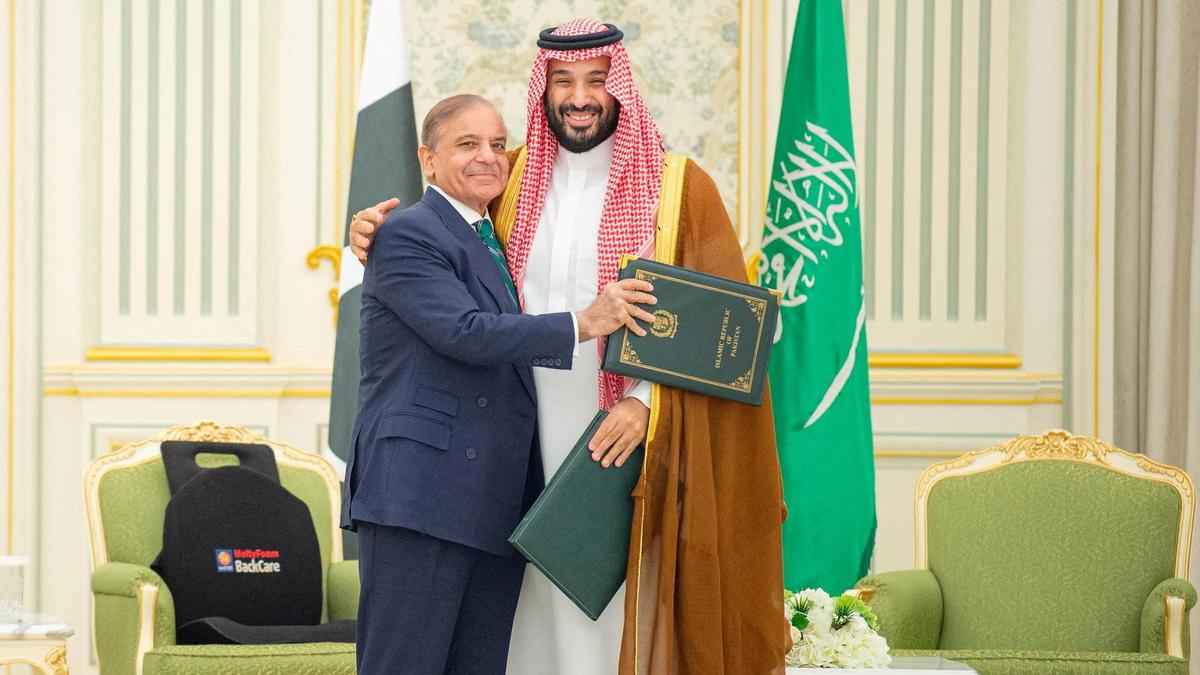
- 23 Sep 2025
In News:
- Recently, Saudi Arabia and Pakistan signed a Strategic Mutual Defence Agreement (SMDA) in Riyadh, formalising a long-discussed framework for joint defence and mutual security.
- The agreement, viewed as a landmark in bilateral ties, symbolises a renewed effort to institutionalise their security partnership amid changing regional dynamics and waning U.S. influence in West Asia.
Nature and Scope of the Pact
- The SMDA commits both nations to collective defence, stipulating that any attack on one country will be treated as an attack on both.
- It builds upon the 1982 Bilateral Security Cooperation Agreement, strengthening channels of military coordination, intelligence exchange, training, and arms trade.
- The pact extends across conventional defence cooperation, advisory roles, and — in principle — joint deterrence, though not explicitly nuclear.
Strategic Context
- The timing of the agreement follows rising regional uncertainty, including Israel–Qatar tensions, Yemen conflict spillovers, and Iran–Saudi rivalry.
- By signing the SMDA, Riyadh signals its intent to pursue greater regional self-reliance in defence, moving beyond full dependence on the U.S. security umbrella.
- For Pakistan, it secures much-needed economic and energy support from Saudi Arabia amid a deep fiscal crisis, while reaffirming its role as a key security partner in the Islamic world.
Key Drivers
- Mutual Security Assurance: Establishes a framework for joint deterrence and defence coordination.
- Economic Complementarity: Opens avenues for Saudi financial assistance, arms procurement, and energy trade with Pakistan.
- Symbolic Islamic Solidarity: Positions Pakistan as a pan-Islamic security contributor, enhancing its strategic visibility.
- Regional Rebalancing: Demonstrates Saudi Arabia’s effort to diversify security partnerships beyond Washington and regional blocs.
Implications
1. For India
- Strategic Caution: While the pact theoretically enables Pakistan to seek Saudi backing in a potential India–Pakistan confrontation, Riyadh’s growing ties with India — including $42.9 billion in bilateral trade, defence collaboration, and major investments — make an overt anti-India stance unlikely.
- Diplomatic Opportunity: New Delhi can leverage its energy and economic partnerships to maintain Saudi neutrality in South Asian affairs.
- Policy Imperative: India must sustain strategic dialogue and ensure Arab neutrality in regional crises through proactive diplomacy.
2. Regional and Global Dimension
- Shift in Gulf Security Architecture: Reflects a decline in U.S. dominance and emergence of a multipolar Gulf order, with Riyadh exploring independent alliances.
- Iran–Saudi–Pakistan Equation: Enhances Saudi deterrence posture against Iran, Yemeni Houthis, and potentially Israel’s unilateral actions.
- Nuclear Sensitivities: Raises concerns about possible nuclear collaboration, though the actual transfer of Pakistani nuclear technology to Saudi Arabia remains highly improbable, constrained by global non-proliferation norms and Israeli sensitivities.
Way Forward for India
- Deepen Defence and Security Cooperation: Expand joint training, exercises, and intelligence exchanges with Saudi Arabia.
- Energy Diplomacy: Pursue long-term crude oil and green hydrogen partnerships to consolidate interdependence.
- Strategic Monitoring: Closely track SMDA implementation, including possible Pakistani troop deployments or defence projects.
- Maritime Synergy: Strengthen India’s presence in the Arabian Sea through naval cooperation to protect vital energy routes.
- Economic Leverage: Utilize India’s market potential and diaspora network as stabilising anchors in Indo-Saudi relations.
GST 2.0
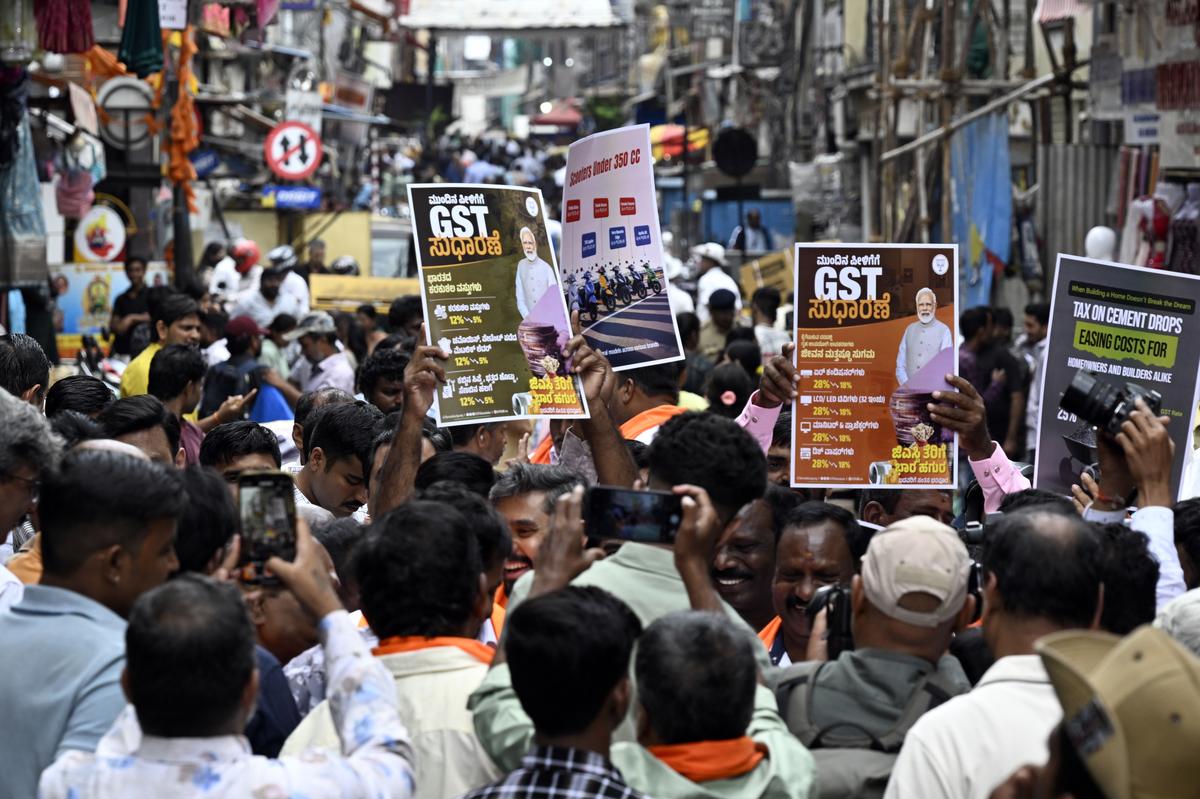
- 23 Sep 2025
In News:
The Government of India launched GST 2.0, marking a significant revamp of the Goods and Services Tax framework. Prime Minister Narendra Modi described the initiative as the “GST Bachat Utsav”, highlighting its focus on savings, simplicity, and growth.
Overview
- GST 2.0 represents the most comprehensive reform since the introduction of the Goods and Services Tax in 2017.
- It focuses on rationalising tax rates, reducing compliance burden, and boosting consumption and investment by lowering tax rates on more than 375 items.
Objectives
- Enhance household savings: By cutting rates on essential goods and services, it seeks to leave more disposable income with consumers, thereby stimulating demand.
- Simplify the tax framework: Aligns similar goods under the same slab to minimise disputes and litigation.
- Promote ease of doing business: Reduces procedural complexities and enhances transparency through digital solutions.
Key Features
- Simplified Tax Structure:Moves towards a broad two-slab system—5% (merit rate) and 18% (standard rate)—with a 40% slab for demerit or luxury goods.
- Consumer-Centric Relief:Tax reductions on essential food items, life and health insurance, and beauty and wellness services.
- Technology-Driven Compliance:Introduces digital registration, pre-filled returns, and automated refund systems, including 90% provisional refunds for Integrated Dispute Settlement (IDS) cases.
- Input-Output Correction:Aligns related goods under the same tax bracket to avoid input-output tax mismatches.
- Support for Key Sectors:Rate cuts to encourage investment and growth in textiles, agriculture, construction, and services industries.
Revised Tax Slabs
|
Rate |
Category / Examples |
|
0.25% |
Rough diamonds, precious stones |
|
1.5% |
Cut and polished diamonds |
|
3% |
Precious metals (gold, silver, pearls) |
|
5% |
516 items including food, agricultural machinery, medical devices, hydrogen vehicles, health & life insurance, salons |
|
18% |
640 items including machinery, chemicals, paints, automobile parts, small cars/bikes |
|
40% (Demerit Rate) |
Pan masala, tobacco, aerated beverages, luxury yachts, private aircraft, high-end vehicles |
|
Special Provision |
Bricks remain under dual option — 6% (without ITC) or 12% (with ITC) |
Significance: GST 2.0 is expected to spur demand, enhance compliance, and boost industrial growth, positioning India’s indirect tax system among the most simplified globally.
Iridogorgia Chewbacca
- 22 Sep 2025
In News:
Marine scientists have identified a new species of deep-sea coral, named Iridogorgiachewbacca, after the iconic Star Wars character Chewbacca. The name was inspired by the coral’s long, curly, and “hairy” branches resembling the furry appearance of the Wookiee warrior from the franchise.
Discovery and Habitat
- The coral was first observed in 2006 off the coast of Moloka?i (Hawaii) and later near the Mariana Trench in 2016, within the tropical western Pacific Ocean.
- It has now been officially described and classified as a new species in the genus Iridogorgia, following extensive research and genetic testing conducted by an international team of scientists, including Professor Les Watling from the University of Hawai?i at M?noa.
- The discovery was formally published in the scientific journal Zootaxa, highlighting its contribution to deep-sea biodiversity research.
About Iridogorgiachewbacca
- Taxonomy: Belongs to the genus Iridogorgia under the class Anthozoa, a group of deep-sea soft corals.
- Physical Features:Characterised by long, flexible, spiral-like branches with a shiny surface that reflects light in unique ways. These hair-like branches give it a distinct “furry” appearance.
- Growth Pattern: The coral grows upright and solitary on deep-sea rocky substrates, often hundreds to thousands of metres below sea level.
- Colony Structure: Each coral colony is made up of thousands of small polyps working together as a single organism.
Scientific Significance
The identification of Iridogorgiachewbacca underscores the vast biodiversity of the deep ocean, much of which remains unexplored. Even in relatively well-studied regions such as the western Pacific, new species continue to be discovered, highlighting the importance of deep-sea research and conservation.
Understanding Corals
- Biological Nature: Corals are marine animals, not plants, and remain sessile (attached to the seabed).
- Symbiotic Relationship: They coexist with microscopic algae called zooxanthellae, which provide nutrients through photosynthesis.
- Feeding: Corals also use their tiny, tentacle-like structures to capture food particles from the surrounding water.
- Ecological Role: Coral ecosystems support immense marine biodiversity, acting as habitats, breeding grounds, and protection zones for numerous marine species.
Why It Matters
- Expands scientific understanding of deep-sea ecosystems and their unique biodiversity.
- Reinforces the need for marine conservation amid increasing threats from deep-sea mining, climate change, and ocean acidification.
- Demonstrates how popular culture references can enhance public engagement with scientific discoveries, making marine science more accessible.
Pradhan Mantri Mudra Yojana (PMMY)
- 22 Sep 2025
In News:
Launched in 2015, the Pradhan Mantri Mudra Yojana (PMMY) is a flagship financial inclusion initiative of the Government of India. The scheme seeks to provide affordable credit to micro and small enterprises (MSEs) engaged in non-farm income-generating activities, thereby integrating them into the formal financial ecosystem.
Objective
- PMMY aims to “fund the unfunded” by facilitating access to institutional credit for small entrepreneurs who traditionally lack collateral or formal financial history.
- The scheme empowers these enterprises through loans provided by Public Sector Banks (PSBs), Regional Rural Banks (RRBs), Cooperative Banks, Private Banks, Foreign Banks, Micro Finance Institutions (MFIs), and Non-Banking Financial Companies (NBFCs).
Key Features and Loan Details
- Loan Amount: Up to ?10 lakh for non-farm income-generating activities across sectors such as manufacturing, processing, trading, and services.
- Eligibility: Any Indian citizen with a viable business plan for such activities can apply for a MUDRA loan through approved institutions.
- Subsidy: PMMY does not directly offer subsidies; however, if linked to other government schemes with capital subsidies, those benefits can be availed concurrently.
Categories of MUDRA Loans
|
Category |
Loan Range |
Target Group |
|
Shishu |
Up to ?50,000 |
New or micro enterprises in the early stage |
|
Kishore |
?50,000 – ?5 lakh |
Businesses seeking growth or consolidation |
|
Tarun |
?5 lakh – ?10 lakh |
Enterprises looking to expand operations |
Achievements under MUDRA 1.0
- Credit Outreach: Over ?27.75 lakh crore has been disbursed to nearly 47 crore beneficiaries, expanding access to formal credit for small entrepreneurs.
- Social Inclusion: Around 69% of loan accounts are held by women, while 51% belong to SC, ST, and OBC categories — strengthening financial inclusion and social equity.
- Employment Generation: The scheme has spurred job creation and self-employment, particularly in rural and semi-urban areas, fostering local entrepreneurship and economic decentralisation.
Vision for MUDRA 2.0
To further enhance the scheme’s reach and impact, the proposed MUDRA 2.0 envisions the following reforms:
- Wider Outreach: Greater focus on underserved rural and semi-urban regions through digital platforms and community-level facilitation.
- Financial Literacy & Mentorship: National-level programmes to improve awareness about budgeting, savings, digital transactions, and credit management to ensure sustainable enterprise growth.
- Enhanced Credit Guarantee Scheme (ECGS): A robust guarantee mechanism to minimise lender risk and encourage more credit flow to micro enterprises.
- Real-Time Monitoring Framework: Technology-driven systems for tracking disbursal, utilisation, and repayment to ensure transparency and reduce misuse.
- Impact Evaluation: Periodic socio-economic assessments to measure outcomes on income generation, employment, and business viability.
Adamya Fast Patrol Vessel
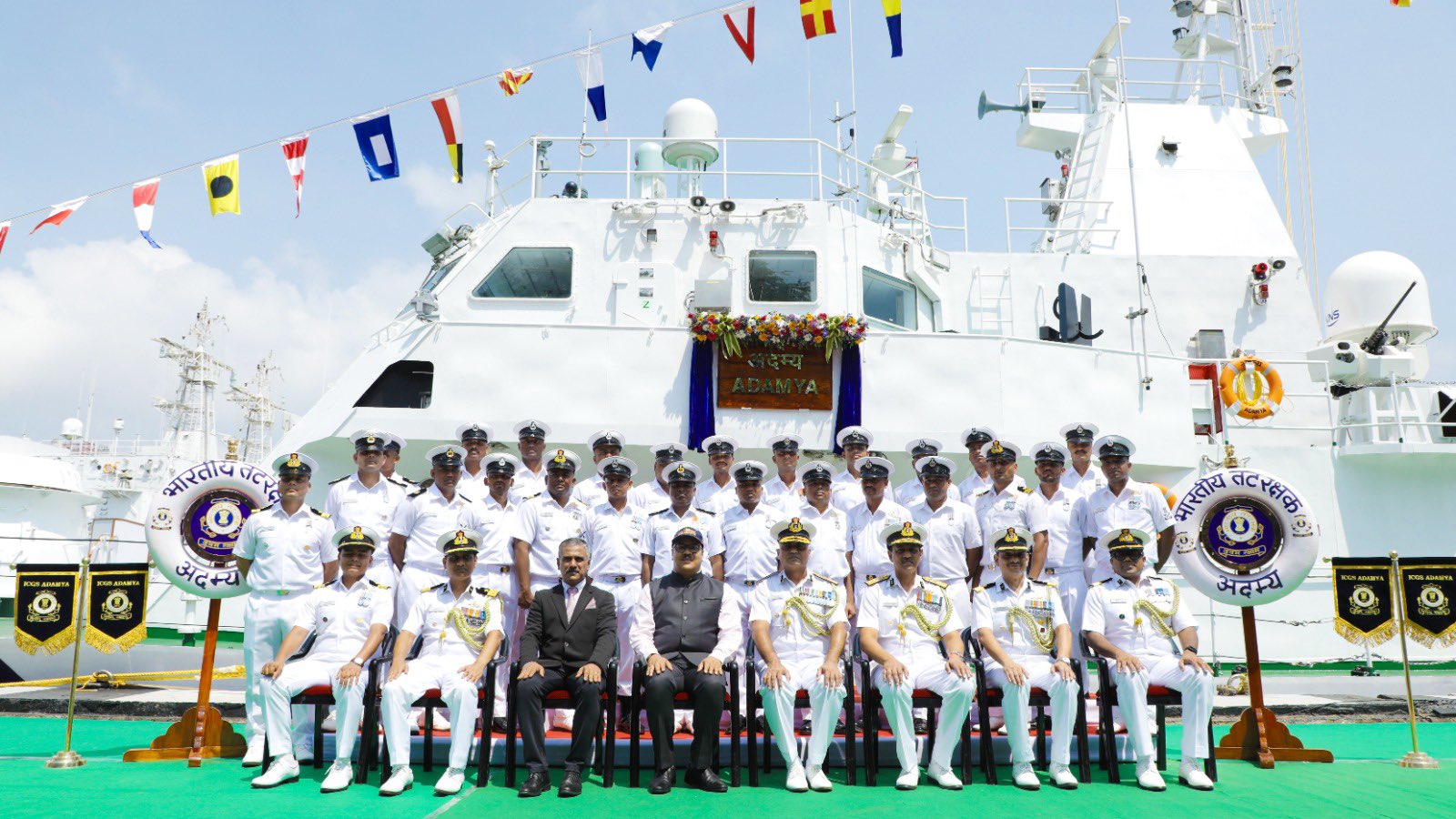
- 22 Sep 2025
In News:
The Indian Coast Guard Ship (ICGS) Adamya, the first in a new series of eight Adamya-class Fast Patrol Vessels (FPVs), was commissioned at Paradip Port, Odisha. The vessel, designed and built indigenously by Goa Shipyard Limited (GSL), marks another step forward in India’s Aatmanirbhar Bharat initiative in the defence sector.
About ICGS Adamya
- Meaning: “Adamya” translates to indomitable, symbolizing the Indian Coast Guard’s (ICG) resolve to safeguard the nation’s maritime interests.
- Operational Base: The ship will be based at Paradip, Odisha, under the administrative control of the Commander, ICG Region (North East).
- Crew Strength: The vessel is manned by five officers and 34 personnel.
- Primary Role: Coastal surveillance, anti-smuggling operations, anti-poaching patrols, and search and rescue missions within India’s maritime zones.
Key Specifications
|
Feature |
Specification |
|
Displacement |
Approx. 320 tons |
|
Speed |
Maximum 28 knots |
|
Endurance |
1500 nautical miles at economical speed |
|
Propulsion |
Two 3000 KW diesel engines |
|
Builder |
Goa Shipyard Limited |
|
Indigenous Content |
Over 60% |
Technological Highlights
- First-of-its-kind Propulsion:The Adamya is the first Indian vessel fitted with indigenously developed Controllable Pitch Propellers (CPPs) and gearboxes, enhancing manoeuvrability and fuel efficiency.
- Advanced Systems:Equipped with an Integrated Bridge System (IBS), Integrated Platform Management System (IPMS), and Automated Power Management System (APMS) to improve operational efficiency and automation.
- Weaponry:Armed with a 30 mm CRN 91 gun and two 12.7 mm stabilized remote-controlled machine guns, supported by advanced fire-control systems.
About Fast Patrol Vessels (FPVs)
Fast Patrol Vessels are medium-sized, high-speed ships used by the Indian Coast Guard for surveillance, policing, and search and rescue operations in coastal areas. They play a vital role in maintaining maritime safety, enforcing laws, and preventing smuggling and infiltration.
SwasthNari, SashaktParivarAbhiyaan
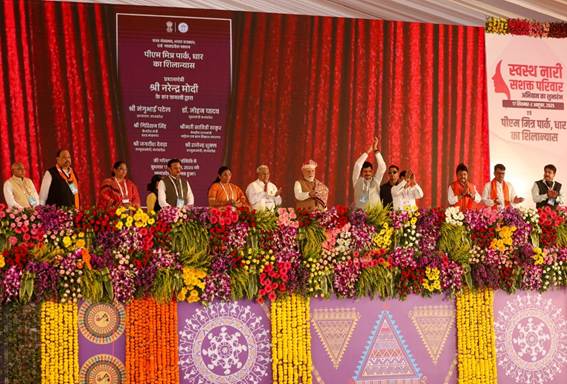
- 22 Sep 2025
In News:
Recently, Prime Minister Narendra Modi launched the ‘SwasthNari, SashaktParivar (SNSP) Abhiyaan’ and the 8thRashtriyaPoshanMaah from Dhar, Madhya Pradesh, marking one of India’s largest-ever health outreach campaigns for women and children. The initiative reflects the government’s commitment to promoting women-led development and holistic family well-being through accessible and equitable healthcare.
About the SwasthNari, SashaktParivarAbhiyaan
- The SNSP Abhiyaan is a joint initiative of the Ministry of Health & Family Welfare (MoHFW) and the Ministry of Women & Child Development (MoWCD).
- It aims to provide preventive, promotive, and curative health services to women and children, particularly in underserved regions.
- The campaign will organize over 10 lakh health camps between 17th September and 2nd October 2025 at Ayushman Arogya Mandirs, Community Health Centres (CHCs), District Hospitals, and other public health facilities across the country.
- This mass mobilisation aligns with the broader vision of Viksit Bharat (Developed India), where “Nari Shakti” (women power) forms the foundation of national progress.
Key Objectives
- Enhance Women’s Health through Screening and Care:Regular health check-ups for women, focusing on non-communicable diseases (NCDs) such as hypertension, diabetes, cancer, anaemia, tuberculosis, and sickle cell disease.
- Promote Maternal and Child Well-being:Strengthening antenatal care, immunisation, nutrition counselling, menstrual hygiene awareness, and adolescent health initiatives.
- Foster Behavioural Change and Health Education:Conducting awareness drives on healthy lifestyle practices, mental health, obesity prevention, and voluntary blood donation.
- Encourage Community Participation:Mobilisation through ASHAs, ANMs, Anganwadi workers, Self-Help Groups (SHGs), Panchayati Raj Institutions (PRIs), MY Bharat volunteers, and youth networks.
- Integrate Digital and Media Outreach:Real-time monitoring through the SASHAKT Portal, along with mass awareness via Doordarshan, All India Radio (AIR), and social media platforms.
Implementation Framework
- Nationwide Health Camps:Health facilities at all levels — from Ayushman Arogya Mandirs to tertiary hospitals — will provide free diagnostic tests, medicines, and specialist consultations.
- Specialist Services:Departments such as Gynaecology, Paediatrics, Ophthalmology, ENT, Dental, Dermatology, and Psychiatry will extend services through AIIMS, ESIC hospitals, Railway and Defence hospitals, and Institutes of National Importance (INIs).
- Public–Private Collaboration:Private hospitals and medical institutions have been encouraged to contribute to the outreach, ensuring broader reach and continuity of care.
- Community Health Monitoring:Volunteer initiatives like Nikshay Mitra will support tuberculosis prevention, while local youth networks promote healthy practices at the grassroots level.
Focus on Sickle Cell Anaemia
- During the launch, the Prime Minister handed over the 1 croreth Sickle Cell Card, underscoring the government’s National Sickle Cell Anaemia Mission. Over 5 crore individuals have been screened so far, especially in tribal-dominated regions, where the disease burden is highest. The mission aims at eliminating Sickle Cell Anaemia by 2047, ensuring improved tribal health outcomes.
Institutional and Grassroots Coordination
- Chief Ministers, Governors, Union Ministers, and local representatives across states participated in the launch events simultaneously. Ground-level implementation is being led by health workers, SHGs, PRIs, and community volunteers, ensuring last-mile outreach and inclusive participation.
Significance
- Largest Health Outreach in India: Over 10 lakh health camps make it the widest public health drive for women and children.
- Women-Centric Development: Strengthens India’s shift toward women-led welfare models under the vision of Viksit Bharat.
- Integrated Governance Model: Combines health, nutrition, and social empowerment across multiple ministries.
- Public Health Transformation: Promotes preventive healthcare, early detection, and equitable access to medical services.
- Focus on Tribal and Rural Health: Addresses critical health challenges in vulnerable and remote regions.
Kurmi Community
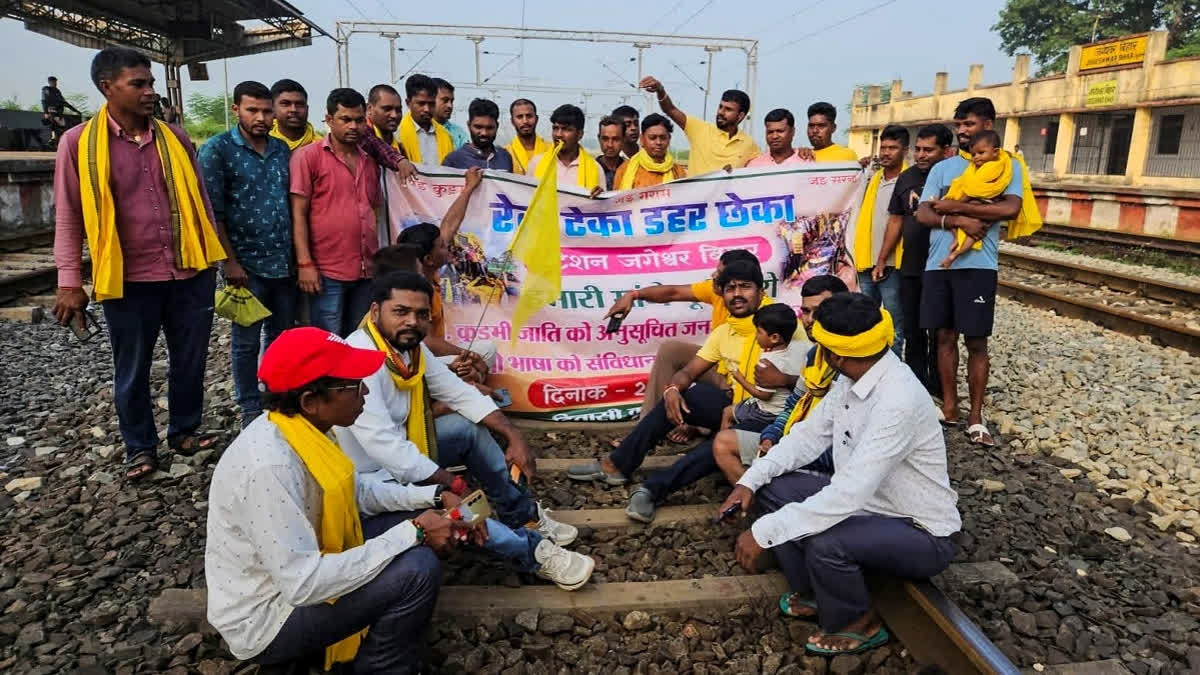
- 22 Sep 2025
In News:
Defying prohibitory orders, members of the Kurmi community in Jharkhand launched a rail blockade across several stations to demand Scheduled Tribe (ST) status and the inclusion of the Kurmali language in the Eighth Schedule of the Constitution. The agitation, organized under the banner of the Adivasi KurmiSamaj (AKS), disrupted train services across the South Eastern and East Central Railway divisions.
About the Kurmi Community
- Origins and Identity:The Kurmis (also known as Kunbi in some regions) are traditionally an agricultural community, predominantly Hindu, found across eastern Uttar Pradesh, southern Awadh, Bihar, Jharkhand, and parts of Odisha.The name “Kurmi” is derived from the Sanskrit word “Krishi” (agriculture), symbolizing their deep connection with farming.
- Historical Background:Historically, Kurmis are believed to be descendants of Kshatriya warriors who took to agriculture. Renowned for their hard work, soil management, and egalitarian culture, the community was lauded by both Mughal and British administrators for its agrarian contributions.
- Social Status:Currently, Kurmis are classified as Other Backward Class (OBC) in most Indian states. However, the community contends that their socio-cultural roots align more closely with tribal heritage, warranting ST recognition.
- Sub-Groups and Culture:The community is divided into several gotras (clans), including Chandel, Chauhan, Solanki, Tomar, Baghel, and Sengar. They are known for maintaining strong community networks and gender-inclusive social practices.
About the Kurmali Language
- Linguistic Affiliation:Kurmali belongs to the Indo-Aryan language family and is primarily spoken in Jharkhand, Bihar, and Odisha.
- Cultural Significance:It serves as a marker of Kurmi identity and is used in folk traditions, oral histories, and local communication.
- Demand for Recognition:Inclusion in the Eighth Schedule would ensure state-supported promotion, education, and preservation of the language, similar to other recognized regional languages.
Government Response and Implications
The Jharkhand administration has maintained a cautious approach, emphasizing the need for maintaining law and order while acknowledging the sensitivity of the community’s demands.The demand for ST status involves constitutional and demographic considerations, requiring evaluation by the Ministry of Tribal Affairs and approval by Parliament under Article 342 of the Constitution.
Gulf of Finland
- 21 Sep 2025
In News:
Estonia recently accused Russia of violating its airspace when three Russian MiG-31 fighter jets entered Estonian airspace over the Gulf of Finland, remaining there for approximately 12 minutes. The incident has heightened tensions between NATO and Russia, as Estonia is a NATO member and takes airspace security seriously in the strategically sensitive region.
About the Gulf of Finland
- Geography: The Gulf of Finland is the easternmost extension of the Baltic Sea, covering an area of 30,000 sq.km. It stretches 400 km from east to west and 19–130 km from north to south.
- Borders:
- North: Finland (including the capital, Helsinki)
- South: Estonia (including the capital, Tallinn)
- East: Russia (including St. Petersburg at the eastern tip)
- Physical Features:
- Average depth: 38 m
- Brackish water with low salinity (~6 ppt)
- Freezes over 3–5 months in winter
- Receives inflows from the Neva and Narva rivers and the Saimaa Canal
- Contains numerous banks, skerries, and islands, including Kotlin Island (Kronstadt), Beryozovye Islands, Lisiy Island, MalyVysotsky Island, among others.
- Climate: Humid continental, characterized by hot summers and relatively harsh winters.
Strategic Significance
The Gulf of Finland is strategically vital due to its location at the eastern edge of the Baltic Sea, proximity to major cities such as Helsinki, Tallinn, and St. Petersburg, and its role as a maritime and military corridor. The airspace and naval routes over the gulf are closely monitored by NATO and Russia, making any unauthorized incursion a serious geopolitical concern.
Implications
- For Estonia: The violation underscores the need for heightened air defense readiness along its borders.
- For NATO: The incident exemplifies the ongoing airspace tensions with Russia, reflecting broader geopolitical frictions in Northern Europe.
- For Russia: Demonstrates strategic airpower projection and interest in asserting influence over the Baltic region.
Yellow-Crested Cockatoos
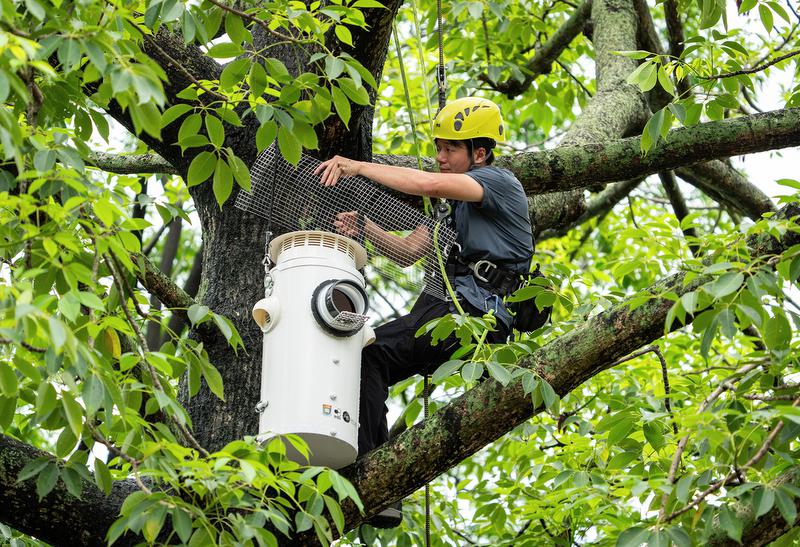
- 21 Sep 2025
In News:
Critically endangered yellow-crested cockatoos (Cacatuasulphurea) have established an unexpected refuge among Hong Kong’s urban landscape, including its parks and university campuses. Once native to Indonesia and East Timor, these snow-white birds with striking yellow crests now face multiple survival challenges, both globally and locally.
Population and Distribution
- The global wild population of yellow-crested cockatoos is estimated at up to 2,000 mature individuals, with around 10% residing in Hong Kong, largely as descendants of released or escaped caged birds.
- Historically, the species was widespread across central and eastern Indonesia and East Timor, but habitat loss has led to dramatic declines on many islands.
- In Hong Kong, they have adapted to urban life but depend on tree cavities for nesting, similar to their natural habitats.
Ecology and Behavior
- Appearance: Medium-sized cockatoo, predominantly white plumage, with a yellow or orange retractable crest.
- Habitat: Forests, forest edges, scrublands, and cultivated areas from sea level up to 1,500 meters.
- Diet: Omnivorous—seeds, fruits, nuts, berries, occasionally insects, small reptiles, and roots.
- Social Behavior: Monogamous, gregarious, and capable of mimicking sounds.
- Breeding Season: September to May.
Threats to Survival
- Habitat Loss: Typhoons, deforestation, and government-led tree trimming in urban areas reduce natural nesting sites.
- Illegal Pet Trade: Poaching continues to threaten wild populations in native habitats.
- Climate Change: Rising temperatures dry out forests, increasing susceptibility to fires and other environmental stresses.
Conservation Initiatives
To counter declining nesting opportunities, Hong Kong conservationists have implemented a practical solution: artificial nest boxes that replicate natural tree cavities.
Aflatoxin
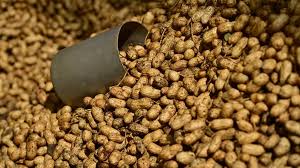
- 21 Sep 2025
In News:
Indian exporters have expressed concerns regarding delays by Indonesia in notifying aflatoxin contamination detected in groundnut shipments from India. This has raised issues about trade compliance and the need for timely communication in international agricultural trade.
Understanding Aflatoxins
- Aflatoxins are highly toxic substances classified as mycotoxins, produced by certain species of fungi. The main fungi responsible are Aspergillus flavus and Aspergillus parasiticus, which belong to the broader Aspergillus group.
- These fungi primarily thrive on agricultural crops, but can also be found in soil, decaying food, and compost. They develop as spores and form networks of microscopic filaments capable of growing on products such as grains, nuts, and other food items.
Sources and Conditions of Contamination
- Aflatoxin contamination commonly occurs in groundnuts, tree nuts, maize, rice, figs, spices, crude vegetable oils, and cocoa beans.
- Contamination can happen before harvest or during storage, especially in warm and humid conditions, which favor fungal growth.
Health Implications
Aflatoxins are genotoxic and carcinogenic, posing serious health risks to both humans and animals. Long-term exposure may lead to liver damage, immunosuppression, and increased cancer risk.
Modes of Human Exposure
- Dietary Intake: Consuming contaminated plant products like peanuts or animal products (meat, milk) from animals fed contaminated feed.
- Occupational Exposure: Farmers, processors, and other agricultural workers may inhale dust containing fungal spores during handling, harvesting, or processing contaminated crops.
This incident underscores the importance of stringent quality control and timely international reporting to prevent health risks and maintain confidence in agricultural trade.
Registered Unrecognised Political Parties (RUPPs)
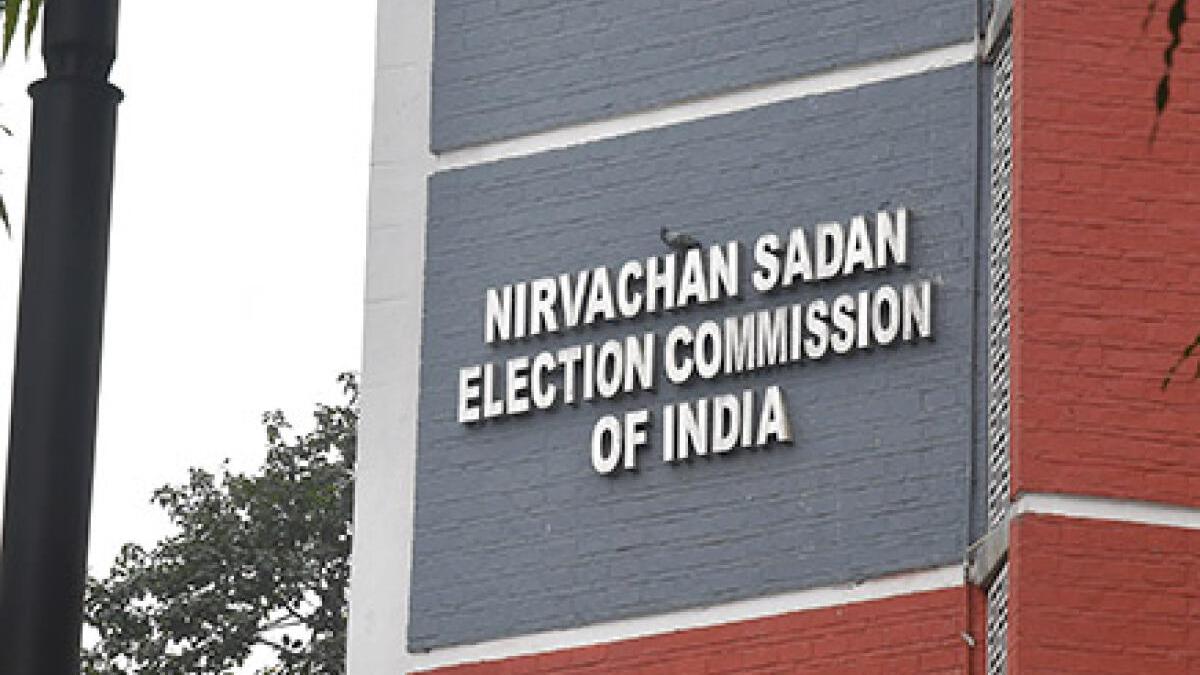
- 21 Sep 2025
In News:
The Election Commission of India (ECI) has de-listed 474 Registered Unrecognised Political Parties (RUPPs) for failing to comply with statutory norms, including not contesting elections in the last six years, as part of its ongoing efforts to clean up the electoral system. This move follows the first phase of de-listing, which removed 334 RUPPs.
About Registered Unrecognised Political Parties (RUPPs)
RUPPs are political entities that are registered with the ECI under Section 29A of the Representation of the People Act (RPA), 1951 but do not yet qualify as state or national parties. They may fall into the following categories:
- Newly registered parties.
- Parties that have not secured sufficient votes to gain state-level recognition.
- Parties that have never contested elections since registration.
Benefits for RUPPs include:
- Tax exemptions under Section 13A of the Income Tax Act, 1961.
- Eligibility for common poll symbols, subject to fielding at least 5% of candidates in state assembly elections.
- Permission to nominate up to 20 ‘star campaigners’ for election canvassing.
Obligations include:
- Contesting elections periodically.
- Filing annual audited accounts and contribution reports.
- Disclosing donations exceeding Rs. 20,000 and restricting cash donations above Rs. 2,000.
Failure to meet these obligations can result in de-listing, as seen in the recent action by the ECI.
Registration and Recognition of Political Parties
Political parties in India are registered with the ECI to avail legal and electoral benefits, including:
- Acceptance of voluntary contributions from individuals and private entities (except government companies).
- Preference in allotment of election symbols to candidates.
- Tax exemptions on donations under Section 13A of the Income Tax Act.
Registered parties that meet additional criteria may gain recognition as State or National Parties, with exclusive privileges:
- Reservation of a unique election symbol.
- Access to free broadcast facilities on Doordarshan and All India Radio.
- Higher campaign expenditure allowances.
- Free copies of electoral rolls before elections.
Criteria for Recognition
State Party: A political party is recognized as a state party if it meets any of the following conditions:
- Wins 3% of seats in the Legislative Assembly in general elections.
- Wins one Lok Sabha seat for every 25 seats allotted to the state.
- Secures at least 6% of votes in a state and wins one Lok Sabha or two Legislative Assembly seats.
- Secures 8% of votes in a state in Lok Sabha or Assembly elections.
National Party: A political party is recognized as a national party if it satisfies any of the following:
- Secures 6% of votes in four or more states in Lok Sabha or Assembly elections and has at least four Lok Sabha members.
- Holds 2% of total Lok Sabha seats with candidates from at least three states.
- Recognized as a state party in at least four states.
Recognition is subject to continuous compliance in subsequent elections; failure to meet the criteria can lead to loss of status.
Significance of De-listing
The de-listing of 474 RUPPs strengthens the electoral system by:
- Ensuring active participation of political parties in the democratic process.
- Promoting transparency in funding and campaign practices.
- Reducing the clutter of inactive or non-compliant parties, thereby making election management more efficient.
This move reflects the ECI’s proactive approach in maintaining a robust and credible electoral framework, which is essential for a healthy democracy in India.
INS Rajali
- 21 Sep 2025
In News:
The Indian Navy’s Eastern Naval Command hosted a two-day seminar on Long-Range Maritime Reconnaissance (LRMR) at INS Rajali, Arakkonam. The event underscored India’s growing maritime responsibilities, technological advancements, and strategic commitment to ensuring security in the Indian Ocean Region (IOR).
Objectives and Key Outcomes
The seminar brought together senior naval commanders, operational experts, and industry representatives, including from Boeing Ltd, to deliberate on the evolving role of LRMR platforms in safeguarding India’s maritime interests.
Key highlights included:
- Release of a compendium of scholarly papers on maritime domain awareness and surveillance.
- Discussions on the operational roles of Boeing P-8I Poseidon aircraft and High-Altitude Long Endurance (HALE) drones, such as the MQ-9B Sea Guardian, in anti-submarine warfare (ASW), multi-domain reconnaissance, and long-range surveillance.
- Recognition of the Navy’s drive to build indigenous capacity while maintaining strategic partnerships with global defence leaders to enhance maritime security cooperation.
INS Rajali: Strategic Maritime Aviation Base
INS Rajali, commissioned on March 11, 1992, is a premier Naval Air Station located near Arakkonam, Tamil Nadu, about 80 km west of Chennai.
- It is spread across 2,200 acres and houses over 4,700 personnel.
- Named after ‘Rajali’, a hawk native to Tamil Nadu’s coast, symbolizing vigilance and speed.
- It operates under the Eastern Naval Command and has the longest military runway in Asia, enabling operations of long-range aircraft.
- The station performs dual roles in operations and training, including hosting the Helicopter Training School (HTS).
INS Rajali has emerged as the hub of India’s maritime reconnaissance and surveillance operations, crucial for maintaining real-time situational awareness over the IOR.
INAS 312: A Milestone Achievement
The seminar also celebrated a historic milestone — the completion of 50,000 flying hours by INAS 312, the Navy’s premier Long-Range Maritime Reconnaissance Squadron based at INS Rajali.
- INAS 312 operates the Boeing P-8I Poseidon aircraft, a state-of-the-art platform known for anti-submarine warfare, surveillance, and maritime strike missions.
- The squadron’s operations have enhanced India’s ability to monitor sea lanes, detect hostile submarines, and secure trade routes across the Indo-Pacific.
- This achievement marks a first in Indian Naval Aviation history, reflecting the squadron’s professionalism and pivotal contribution to national security.
Technological Edge: Integration of LRMR Platforms
The integration of P-8I aircraft with MQ-9B Sea Guardian drones represents a transformative leap in India’s maritime surveillance ecosystem.
- These systems enable persistent intelligence gathering, real-time situational awareness, and high-endurance operations across vast oceanic stretches.
- The synergy between manned and unmanned assets significantly enhances Maritime Domain Awareness (MDA), ensuring rapid response to traditional and non-traditional threats, including piracy, smuggling, and humanitarian emergencies.
Strategic Significance
The LRMR initiative aligns with India’s vision of being a “Net Security Provider” in the Indo-Pacific.
By strengthening reconnaissance and surveillance capabilities, India is:
- Expanding its operational reach and deterrence posture.
- Enhancing interoperability with partner navies.
- Supporting Humanitarian Assistance and Disaster Relief (HADR) missions.
- Contributing to a Free, Open, and Rules-Based Indo-Pacific order.
Exercise Pacific Angel 2025
- 20 Sep 2025
In News:
India has joined the United States and Sri Lanka in Exercise Pacific Angel 2025, the largest multilateral disaster response and humanitarian assistance drill in the Indo-Pacific. The exercise signifies growing regional collaboration in humanitarian aid, disaster relief (HADR), and emergency preparedness amid increasing natural and geopolitical challenges in the Indian Ocean region.
About Exercise Pacific Angel 2025
- Host: Sri Lanka (Katunayake Air Base)
- Participants: United States, Sri Lanka, India, Australia, Bangladesh, Japan, and Maldives.
- Troop Strength: Nearly 90 U.S. and 120 Sri Lankan Air Force personnel, along with contingents and observers from partner nations.
- Assets Deployed:
- U.S.: Two C-130J aircraft
- Sri Lanka: Bell 412, B-212 helicopters, and a King Air 350 aircraft
Key Focus Areas
- Search and Rescue (SAR) operations
- Medical readiness and mass casualty response
- Aviation safety and engineering support
- Aeromedical evacuation drills and air mobility exercises
Linked Regional Drills and Strategic Context
The Pacific Angel series forms part of a broader network of U.S.-led multilateral exercises in South Asia aimed at improving interoperability, crisis response, and regional security.
1. Exercise Tiger Lightning 2025
- Host: Bangladesh
- Participants: Bangladesh Army and U.S. Army Pacific
- Objective: Strengthen counter-terrorism, peacekeeping, jungle warfare, and medical evacuation capabilities.
- Highlights: Simulation-based drills, rescue operations, and counterinsurgency coordination.
2. Exercise Tiger Shark 2025 (Flash Bengal Series)
- Host: Bangladesh
- Participants: Bangladesh Navy’s Special Warfare Diving & Salvage Unit, Para Commando Brigade, and U.S. Special Forces.
- Aim: Enhance maritime security, small-unit tactics, and special operations readiness.
- Training Components: Patrol boat handling, small-arms marksmanship, and maritime interdiction.
3. RQ-21 Blackjack UAS Program
- Location: Bangladesh
- Partnership: U.S. Army & Navy with Bangladesh Army and Navy.
- Purpose: Develop indigenous unmanned aerial surveillance capabilities for border monitoring, maritime domain awareness, and UN peacekeeping missions.
- Structure: Establishment of a joint Army-Navy UAS regiment.
Strategic and Geopolitical Significance
- Enhancing Humanitarian Preparedness:Pacific Angel 25 reinforces the ability of Indo-Pacific nations to jointly respond to natural disasters such as cyclones, tsunamis, and earthquakes, ensuring rapid humanitarian assistance and coordination.
- Building Regional Trust and Interoperability:Joint training fosters mutual understanding, operational coordination, and shared standard operating procedures (SOPs) among participating air forces and disaster response agencies.
- Geostrategic Balancing:The U.S. engagement through multilateral drills in Sri Lanka and Bangladesh, both immediate neighbours of India, signals Washington’s intent to expand its strategic presence in South Asia. This move is viewed within the broader Indo-Pacific strategy aimed at maintaining a “free, open, and resilient region” while counterbalancing China’s growing influence.
- India’s Role:India’s participation aligns with its Neighbourhood First, Security and Growth for All in the Region (SAGAR), and Act East policies. It also strengthens HADR diplomacy, reinforcing India’s image as a net security provider in the Indian Ocean.
Draft Civil Drone (Promotion and Regulation) Bill, 2025
- 20 Sep 2025
In News:
- The Ministry of Civil Aviation (MoCA) has released the draft Civil Drone (Promotion and Regulation) Bill, 2025 for public consultation.
- The legislation seeks to create a comprehensive legal framework for the operation, promotion, and regulation of Unmanned Aircraft Systems (UAS) in India, replacing the existing Drone Rules, 2021.
Objective
- The Bill aims to balance innovation with accountability—promoting the growth of India’s drone ecosystem while ensuring public safety, national security, and privacy.
- It aligns with the government’s vision of leveraging drone technology for governance, logistics, agriculture, and surveillance under the Digital Indiaand Make in India initiatives.
Key Provisions
1. Regulatory Authority
- The Directorate General of Civil Aviation (DGCA) will serve as the principal regulator for drone operations.
- The Ministry of Civil Aviation (MoCA) will oversee policy, promotion, and implementation aspects.
2. Scope and Exemptions
- The Bill applies to all civil unmanned aircraft systems (UAS).
- Exempted: UAS operated by the Armed Forces (Army, Navy, Air Force) and those weighing above 500 kilograms.
3. Registration and Certification
- Mandatory Registration: Every drone must obtain a Unique Identification Number (UIN) from DGCA.
- Type Certification: Manufacturing, sale, or operation of drones requires DGCA-approved Type Certificates ensuring safety and airworthiness.
- Remote Pilot Certification: Operators must hold a valid remote pilot license from DGCA or authorized entities.
4. Airspace Regulation — Digital Sky Zones
To ensure safe integration of drones into civil airspace, the Bill formalizes Digital Sky Zones:
- Green Zone: Free flying permitted without prior clearance.
- Yellow Zone: Requires Air Traffic Control (ATC) clearance.
- Red Zone: Restricted areas; operations allowed only with Central Government approval.
5. Safety, Security, and Insurance
- Mandatory third-party insurance for all drone operators to cover liability.
- Safety Features: Anti-tampering, traceability mechanisms, and airworthiness compliance are compulsory.
- Victim Compensation:
- ?2.5 lakh for death
- ?1 lakh for grievous injury
- Claims to be adjudicated by the Motor Accident Claims Tribunal.
6. Penalties and Enforcement
The Bill introduces stringent penalties to ensure responsible drone usage:
- Imprisonment: 3 months to 3 years.
- Fine: Up to ?1 lakh, or both.
- Violations of the Bharatiya Nyaya Sanhita (BNS), 2023 and Bharatiya Nagrik Suraksha Sanhita (BNSS), 2023related to drone misuse will be cognisable offences.
- Confiscation Powers: DGCA officers, authorized personnel, or police may seize drones, electronic devices, or records if rules are violated.
7. Industry and Stakeholder Involvement
The Bill encourages industry participation and innovation while enforcing compliance. The Drone Federation of India noted that the previously liberalised Drone Rules, 2021 have now been made more stringent in response to security and safety concerns.
Significance
- Strengthens legal enforcement and ensures accountability in drone operations.
- Protects national airspace integrity and citizens’ privacy.
- Supports India’s goal of becoming a global drone hub by 2030 — an industry projected to reach USD 11 billion in value.
- Ensures balance between promotion and regulation, crucial for sectors like agriculture, logistics, disaster management, and infrastructure monitoring.
Aquamonitrix – Portable Ion Chromatograph
- 20 Sep 2025
In News:
A team of scientists from the University of Tasmania, Australia, in collaboration with Aquamonitrix, has developed a portable ion chromatograph that enables real-time, on-site detection of nitrate and nitrite levels in environmental samples.
This innovative device — named Aquamonitrix — is a low-cost, field-deployable version of laboratory ion chromatographs, designed to make analytical chemistry more accessible, sustainable, and educationally enriching.
What is Aquamonitrix?
Aquamonitrix is a compact, low-pressure ion chromatograph capable of separating and detecting anions such as nitrate and nitrite outside traditional laboratory settings. It offers an eco-friendly, battery-operated, and user-friendly alternative to expensive laboratory chromatographs, making it particularly suitable for educational institutions and field researchers.
How It Works
- Sample Preparation: Soil pore water — water held between soil particles — is extracted using a portable vacuum pump, filtered on-site, and directly injected into the device.
- Separation: The chromatograph employs a short column through which a sodium chloride (NaCl) solution acts as a carrier, separating anions based on their chemical properties.
- Detection: Equipped with a UV absorbance detector, it identifies nitrate and nitrite by their distinct absorption peaks in the low UV region.
- Power and Portability: The device operates on a battery, enabling use in remote or field environments such as rivers, greenhouses, and water treatment plants.
Applications and Research Potential
- Environmental Monitoring: Real-time tracking of nitrate and nitrite in rivers, soil, and groundwater.
- Nitrogen Cycle Analysis: Can measure nitrite, nitrate, and ammonia, supporting studies on nutrient conversion in soil and aquatic systems.
- Water Treatment and Agriculture: Enables long-term nutrient monitoring in greenhouses and water management projects.
- Future Development: The research team is working on an arsenic-detecting variant of the instrument — critical for groundwater safety in countries like India and Bangladesh, where arsenic contamination remains a pressing issue.
Significance and Impact
- The Aquamonitrix portable ion chromatograph represents a significant step towards democratizing scientific tools by making high-quality analytical instruments more accessible, affordable, and field-compatible.
- It demonstrates how innovation in instrumentation can serve multiple goals — advancing STEM education, promoting environmental sustainability, and supporting grassroots-level scientific research.
- By integrating education, technology, and environmental stewardship, this innovation aligns with the United Nations Sustainable Development Goals (SDGs) — particularly SDG 4 (Quality Education), SDG 6 (Clean Water and Sanitation), and SDG 13 (Climate Action).
Frontier Tech Repository
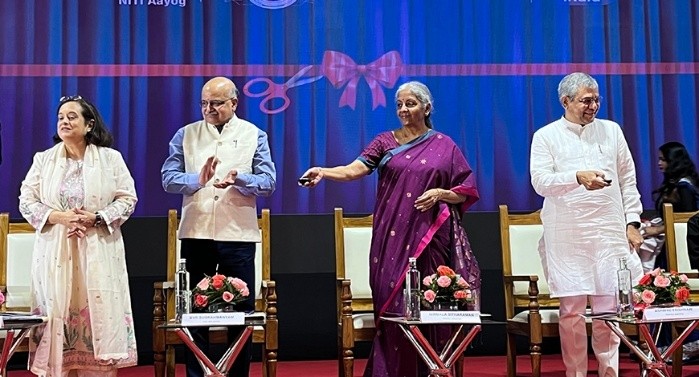
- 20 Sep 2025
In News:
- In a major stride towards achieving Viksit Bharat (Developed India) by 2047, NITI Aayog has launched two landmark initiatives under its Frontier Tech Hub — the ‘AI for Viksit Bharat Roadmap: Opportunity for Accelerated Economic Growth’ and the ‘Frontier Tech Repository’.
- These initiatives aim to harness the transformative potential of Artificial Intelligence (AI) and other frontier technologies to catalyse inclusive growth and innovation across sectors.
AI for Viksit Bharat Roadmap
The AI for Viksit Bharat Roadmap, launched by Finance Minister Smt. Nirmala Sitharaman and Minister for Electronics & IT Shri Ashwini Vaishnaw, outlines a practical and strategic framework to accelerate India’s AI-led growth. It focuses on two primary levers:
- Accelerating AI adoption across industries to boost productivity, efficiency, and innovation.
- Transforming Research and Development (R&D) through Generative AI, enabling India to leapfrog into global innovation leadership.
The roadmap emphasizes AI’s potential to drive robust, inclusive, and technology-driven economic growth, while underscoring the need for a collaborative ecosystem involving government, industry, academia, and startups.
Frontier Tech Repository
- Complementing the roadmap, the Frontier Tech Repository is a digital knowledge platform that showcases over 200 real-world impact stories across four critical sectors — Agriculture, Healthcare, Education, and National Security.
- It demonstrates how states, startups, and innovators are using technology to transform governance and improve livelihoods at the grassroots level.
- The repository serves as both a learning resource and a replication model, helping policymakers and administrators identify scalable frontier technology solutions.
Frontier 50 Initiative
- To ensure widespread adoption, NITI Aayog launched the Frontier 50 Initiative, which will support 50 Aspirational Districts and Blocks in selecting and deploying frontier technologies showcased in the repository.
- The goal is to accelerate service saturation across key Aspirational District Programme (ADP) and Aspirational Block Programme (ABP) themes — such as education, healthcare, and livelihood generation — through tech-enabled governance.
NITI Frontier Tech Impact Awards
- To further motivate innovation, NITI Aayog announced the Frontier Tech Impact Awards, which will recognize three states excelling in the use of technology for improving governance, education, health, and livelihoods. These states will receive support to scale their initiatives and create measurable, transformative outcomes.
About the NITI Frontier Tech Hub
- The Frontier Tech Hub serves as NITI Aayog’s platform to anticipate mega technological shifts and strategize India’s preparedness to harness emerging technologies for inclusive growth, supply chain resilience, and national security.
- It brings together experts from government, industry, and academia to assess opportunities and risks associated with frontier technologies such as AI, quantum computing, and biotechnology, thereby shaping policies for technology-driven development.
Eustoma
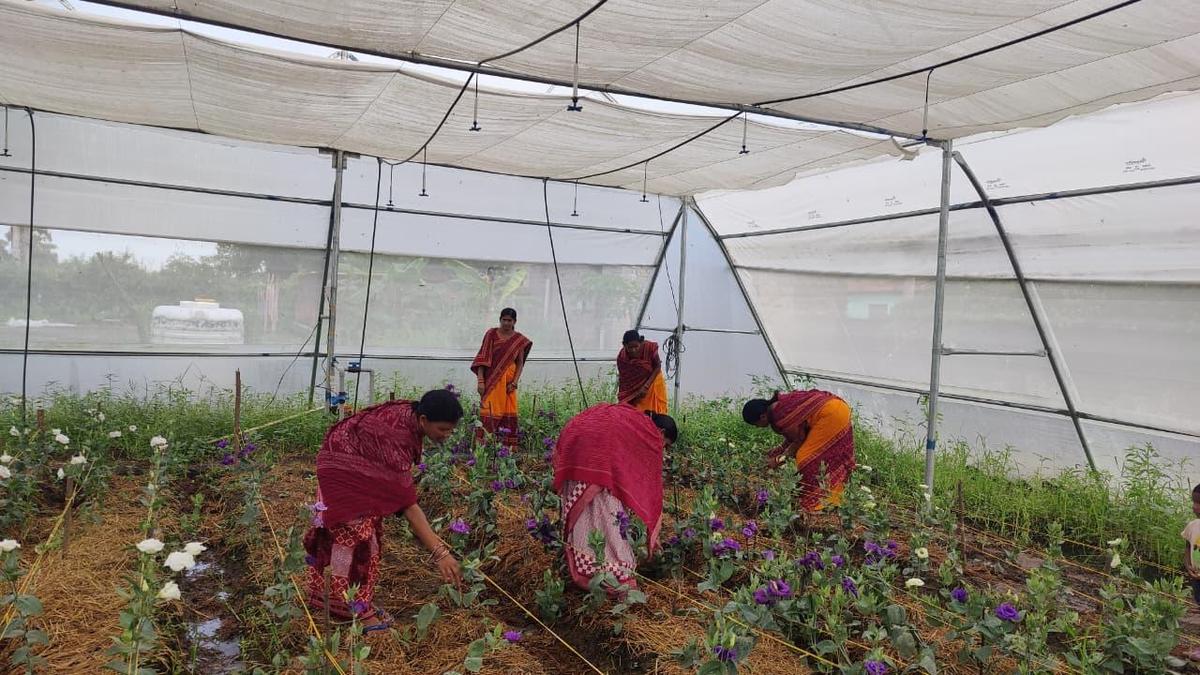
- 20 Sep 2025
In News:
The National Botanical Research Institute (NBRI), under the Council of Scientific and Industrial Research (CSIR), has achieved a remarkable breakthrough by successfully cultivating the Eustoma flower in Odisha. This marks the first instance of the exotic ornamental species blooming locally in the state, which until now depended solely on imports for its availability.
About Eustoma
- Scientifically known as Eustoma grandiflorum and commonly referred to as Lisianthus, Prairie Gentian, or Texas Bluebell, the flower is a perennial herbaceous ornamental species native to the grasslands of North America — including Mexico, the southern United States, the Caribbean, and northern South America. Globally, it ranks among the top ten popular cut flowers due to its elegance and commercial appeal.
Distinctive Features
- Eustoma is renowned for its rose-like blossoms, vibrant color range, long stems, and extended vase life, which have earned it the title of the “next rose” in the international flower trade. Its blooms exhibit a rich palette of colors — from pure white to shades of pink, purple, and blue — making it highly desirable for cut flower arrangements and potted ornamental use.
Growth Conditions and Habitat
- The plant thrives in warm, sunny climates and prefers well-drained yet moisture-retentive soil, enriched with garden compost or well-rotted manure. In its natural habitat, it grows in grasslands and disturbed areas, making it adaptable to varied environmental conditions when cultivated with appropriate care.
Significance of the Odisha Breakthrough
- The successful cultivation of Eustoma in Odisha represents a scientific and economic milestone. Previously, the flower had to be imported, which limited access for local floriculturists and increased costs. With NBRI’s intervention, local propagation techniques have now been developed, enabling indigenous production of this high-value ornamental crop.
- By adopting Eustoma cultivation, farmers in Odisha and other states with similar climatic conditions can benefit from higher income potential due to the flower’s global demand and premium market value.
Broader Implications
- The success underscores India’s growing capabilities in plant biotechnology, floriculture innovation, and agro-based entrepreneurship. It aligns with the government’s broader objectives of Atmanirbhar Bharat (self-reliant India) by reducing dependency on imports and promoting sustainable rural livelihoods through scientific advancements.
Polypropylene and Bioethanol Initiatives in Assam

- 19 Sep 2025
In News:
Prime Minister Narendra Modi recently laid the foundation stone for a Polypropylene (PP) Plant and inaugurated a Bioethanol Plant at Numaligarh Refinery Limited (NRL) in Golaghat, Assam. These projects mark a major step in strengthening India’s energy security, promoting clean energy, and enhancing industrial development in the Northeast.
About Polypropylene
Polypropylene (PP) is a thermoplastic polymer produced by the polymerization of propylene. Belonging to the polyolefin family, it is a lightweight, flexible, and heat-resistant material widely used in modern industries.
Key Properties:
- Chemical resistance: Highly resistant to acids, alkalis, and solvents, making it ideal for packaging cleaning products.
- Lightweight and durable: One of the lightest commodity plastics, suitable for high-temperature applications.
- Flammable: Requires controlled processing and handling.
- Insulating properties: Offers strong electrical insulation, used in casings, cables, and medical equipment.
Applications:
Polypropylene is extensively used in packaging, textiles, ropes, carpets, medical kits, automotive components, and agricultural tools. Its versatility makes it integral to both industrial and domestic use.
About the Polypropylene Plant at NRL
The Polypropylene Plant at Numaligarh Refinery aims to enhance India’s petrochemical capacity and reduce dependence on imports. It will serve as a key catalyst for industrial growth in Assam and contribute to the ‘Make in Assam’ and ‘Make in India’ initiatives.The plant will:
- Generate significant employment opportunities for the local population.
- Strengthen manufacturing sectors linked to plastics, textiles, and medical equipment.
- Promote regional economic diversification in the Northeast.
The Bioethanol Plant and Clean Energy Push
The newly inaugurated Assam Bioethanol Plant, also at NRL, produces bioethanol from bamboo—a sustainable feedstock abundantly available in the region. This initiative supports India’s Ethanol Blending Programme and aims to reduce reliance on imported fossil fuels.
Key Benefits:
- Encourages bamboo cultivation, benefitting farmers and tribal communities.
- Establishes bamboo chipping units and ensures steady raw material supply.
- Generates employment for thousands of people and boosts the rural economy.
- Promotes green energy and circular economy principles.
The government has allocated around ?200 crore annually to support bamboo-based ethanol production, which will provide a long-term economic boost to the region.
Strategic Significance
Prime Minister Modi emphasized that energy and semiconductors are two critical pillars of India’s self-reliance journey. Assam, through projects like these, is emerging as a key energy hub.
- India is now among the top five countries in solar power capacity.
- The government has launched the National Deepwater Exploration Mission to explore domestic oil and gas reserves under the “Samudra Manthan” initiative.
- A semiconductor factory worth ?27,000 crore is being set up in Morigaon, positioning Assam as a vital node in India’s electronics manufacturing ecosystem.
Cultural and Socio-Economic Integration
Beyond industrial growth, these projects are part of a broader vision to integrate Assam’s cultural heritage with modern development. The state’s traditional identity—symbolized by the Gamosa, Eri, and Muga silk—will now extend to polypropylene-based textiles and industries.
Initiatives such as Mission Basundhara, welfare schemes for tea garden workers, and the development of tourism circuits like the MaaKamakhya Corridor underscore inclusive growth in the region.
Centre for Cellular and Molecular Biology
- 19 Sep 2025
In News:
Scientists at the CSIR–Centre for Cellular and Molecular Biology (CCMB), Hyderabad, have uncovered a crucial mechanism explaining how white blood cells (WBCs) rapidly alter their internal structure to combat pathogens. The discovery reveals how immune cells adapt their cytoskeletons to move and respond swiftly during immune defence.
The Discovery
A research team led by Dr. Saikat Chowdhury at CCMB discovered how white blood cells form flat protrusions in the direction of pathogens, enabling them to move and engulf harmful microbes.
This process occurs within microseconds, allowing immune cells to dynamically remodel their internal structure to execute defence responses. The findings were published in the journal Nature Structural & Molecular Biology.
Mechanism Behind the Discovery:
- The shape and movement of cells depend on a dense, branched actin network near the cell membrane.
- Actin, a structural and dynamic protein, enables cells to push the membrane outward, forming protrusions.
- The CCMB team found that SPIN90, a regulatory protein, plays a pivotal role in generating new actin meshworks.
- SPIN90 works as a dimer with another protein complex, Arp2/3, to initiate the growth of new actin filaments in two opposite directions, separated by about 150°.
- These newly formed filaments serve as scaffolds, helping the cell reshape itself or move toward invading pathogens.
According to Dr. Chowdhury, SPIN90’s ability to build actin filaments bidirectionally helps cells create adaptable cytoskeletal frameworks, shedding light on how cells remodel themselves in both health and disease.
Scientific Significance
This discovery enhances understanding of:
- Cellular movement and immune response mechanisms.
- Cytoskeletal dynamics—a core process in cellular biology.
- Pathophysiological processes, such as cancer metastasis, immune disorders, and wound healing, where cell shape and motility are crucial.
It also opens new avenues for biomedical research in designing therapies that target cell motility and immune regulation.
About the CSIR–Centre for Cellular and Molecular Biology (CCMB)
- Established: 1977
- Location: Hyderabad, Telangana
- Parent Organization: Council of Scientific and Industrial Research (CSIR) under the Ministry of Science & Technology, Government of India
- Designation: UNESCO-recognized “Centre of Excellence” under the Global Molecular and Cell Biology Network
Mandate and Objectives:
- Conduct high-quality basic and applied research in frontier areas of modern biology.
- Promote centralized national facilities for cutting-edge biological research.
- Provide training and capacity-building for students and scientists in molecular biology, genomics, proteomics, and bioinformatics.
- Facilitate collaborations with national and international research institutions.
Research Areas:
- Genetics and Genomics
- Molecular Medicine and Biotechnology
- Immunology and Cell Biology
- Bioinformatics and Systems Biology
- Environmental and Agricultural Biotechnology
CCMB’s research integrates fundamental and translational science, addressing challenges in human health, agriculture, and environmental sustainability.
Doctrine of Escheat
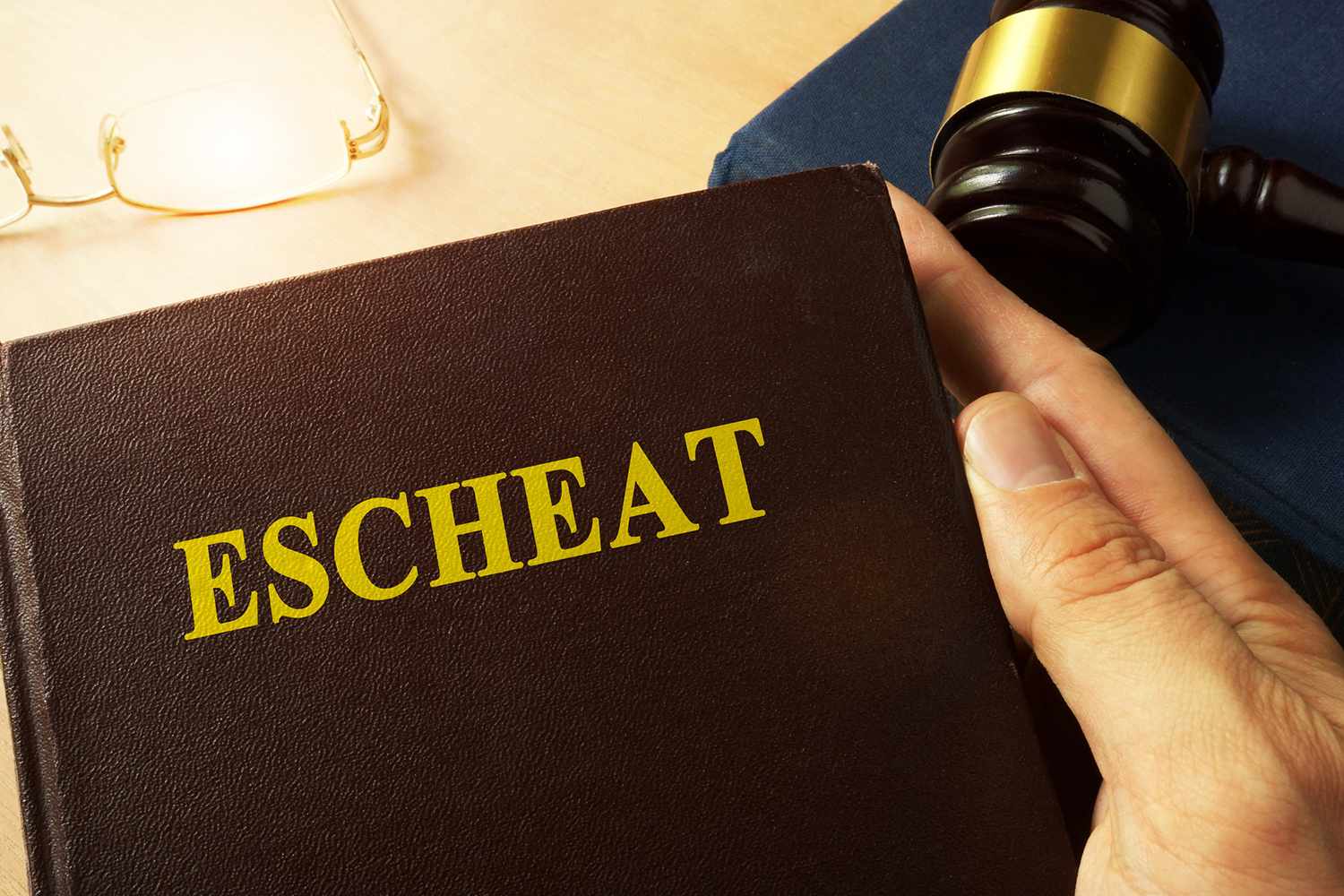
- 19 Sep 2025
In News:
The Supreme Court of India has recently ruled that a State Government cannot invoke the Doctrine of Escheat under Section 29 of the Hindu Succession Act, 1956, when a valid Will has been executed and probate has been granted by a competent court. The judgment underscores that the principle of escheat applies only as a last resort, when an individual dies intestate (without a Will) and without legal heirs.
What is the Doctrine of Escheat?
The Doctrine of Escheat is a long-standing legal principle ensuring that no property remains ownerless. When a person dies without a Will and without any legal heirs, ownership of the property reverts to the State.
This doctrine safeguards social and legal order, ensuring that property does not remain unclaimed or misused.
Situations Covered Under Escheat:
- Death without a Will (Intestate): When a person dies without making a valid Will and leaves no heirs.
- Unclaimed or Abandoned Property: When ownership cannot be established for a prolonged period.
The underlying idea is that property must always have an identifiable owner, and in the absence of heirs, the State becomes the ultimate owner.
Historical Background
- The term “escheat” originates from the Old French word “eschete”, meaning “to fall to.”
- The concept dates back to the feudal system of medieval Europe, where land held by a tenant reverted to the lord if the tenant died without an heir or was convicted of crimes such as treason.
- Over time, this right passed from feudal lords to the monarch or the state, ensuring continuous control over land and preventing property from becoming ownerless.
Doctrine of Escheat in Modern Legal Systems
In contemporary jurisprudence, escheat prevents property from remaining in legal limbo. The State assumes ownership of such assets, either permanently or temporarily, until legitimate claimants are found.
Different countries have codified laws governing this process, ensuring fairness and transparency.
Doctrine of Escheat in India
In the Indian legal framework, the doctrine operates through two main provisions:
- Article 296 of the Constitution of India:Provides that any property that escheats or lacks legal ownership vests in the State or Union, depending on where the property is situated.
- Section 29 of the Hindu Succession Act, 1956:States that if a Hindu dies intestate and without any legal heirs, the property escheats to the Government, which assumes ownership subject to all legal obligations.
Supreme Court’s Observation
In the recent judgment, the Supreme Court held that:
- The Doctrine of Escheat is a remedy of last resort and cannot be invoked when a valid Will exists.
- Once a Will is probated (i.e., validated by a competent court), the State has no locus to challenge the testamentary disposition under the garb of escheat.
- The testator’s intent must prevail, and the property should devolve strictly as per the terms of the Will.
This ruling reinforces the sanctity of testamentary freedom and clarifies the limited applicability of escheat provisions.
Significance of the Ruling
- Protects Individual Property Rights: Upholds the right of individuals to dispose of their property through a valid Will.
- Limits State Overreach: Prevents arbitrary claims by the State over private property.
- Clarifies Legal Interpretation: Defines the precise scope of Section 29 of the Hindu Succession Act and Article 296 of the Constitution.
- Ensures Legal Certainty: Strengthens property succession jurisprudence in India.
Carlsberg RidgeRegion
- 19 Sep 2025
In News:
India has secured an exploration contract from the International Seabed Authority (ISA) to explore polymetallic sulphide deposits in the Carlsberg Ridge region of the north-western Indian Ocean. The agreement marks a major step in India’s pursuit of deep-sea resource development and its broader vision under the Deep Ocean Mission.
About the Agreement
- The exploration contract grants India the right to survey and explore an area of approximately 3,00,000 square kilometres in the Carlsberg Ridge, a tectonically active region rich in polymetallic sulphides — deposits containing valuable metals such as copper, zinc, gold, silver, and rare elements.
- The International Seabed Authority (ISA), an autonomous body under the United Nations Convention on the Law of the Sea (UNCLOS), regulates mineral exploration and exploitation activities in international seabed areas beyond national jurisdictions.
- This licence enhances India’s presence in seabed resource exploration, complementing its earlier exploration area for polymetallic nodules in the Central Indian Ocean Basin.
About Carlsberg Ridge
- The Carlsberg Ridge is a mid-oceanic ridge — a divergent plate boundary — located in the western Indian Ocean.
- It extends from the triple junction of the African, Indian, and Australian plates, connecting to the Mid-Indian Ridge, and runs northwest toward the Gulf of Aden.
- The ridge acts as a tectonic boundary between the Somali Plate and the Indian Plate.
- Geographical features:
- Lies at an average depth of 6,000–12,000 feet (1,800–3,600 m) below sea level.
- Rises about 7,000 feet (≈2,100 m) above the surrounding seafloor.
- Extends westward near Socotra Island, eventually linking with the East African Rift System via the Gulf of Aden.
- It is one of the most prominent mid-ocean ridge systems in the Indian Ocean, characterized by frequent seismic activity and hydrothermal vents, which are potential sources of metal-rich sulphide minerals.
Significance of the Exploration
- Strategic Resource Security:Polymetallic sulphides contain economically vital metals like copper, zinc, gold, and silver, essential for clean energy technologies, electronics, and strategic industries.
- Technological Advancement:The project supports India’s Deep Ocean Mission, fostering indigenous capability in deep-sea mining, remotely operated vehicles (ROVs), and underwater robotics.
- Scientific and Environmental Research:Exploration in the Carlsberg Ridge will advance understanding of seafloor geology, hydrothermal systems, and biodiversity in deep-sea environments.
- Geopolitical and Economic Leverage:Strengthens India’s position in global ocean governance and the blue economy, ensuring equitable access to seabed resources.
About the International Seabed Authority (ISA)
- Headquarters: Kingston, Jamaica
- Established: 1994 under UNCLOS (1982)
- Mandate: Regulates mineral-related activities in the “Area” — the seabed and ocean floor beyond national jurisdiction — ensuring that exploration and exploitation are conducted for the benefit of mankind while protecting the marine environment.
Exercise Pacific Reach 2025
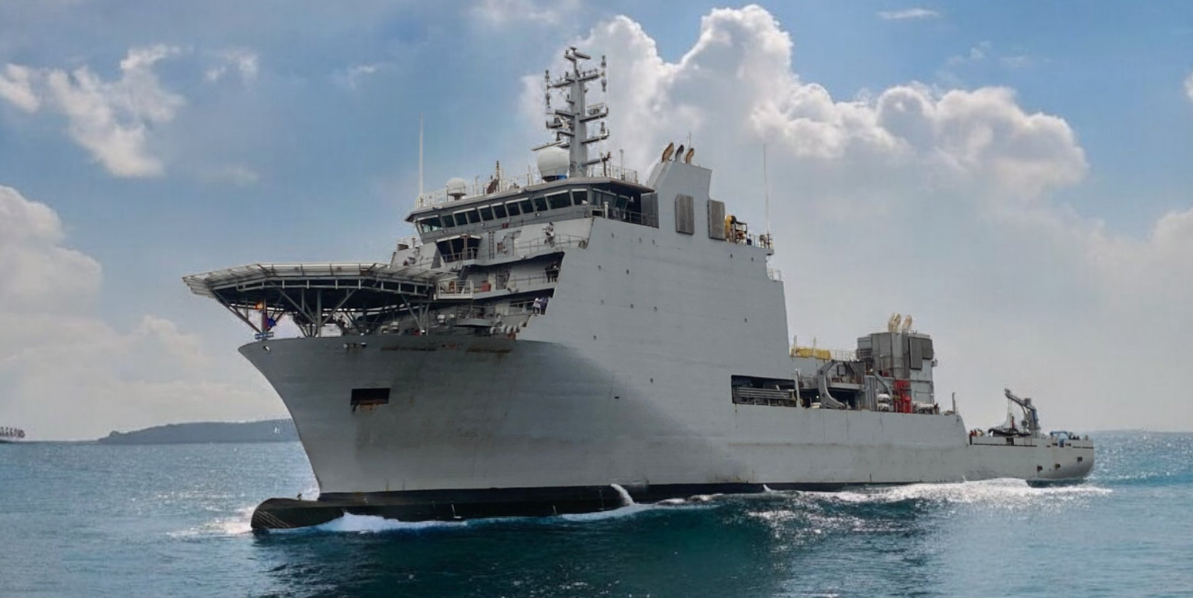
- 19 Sep 2025
In News:
The Indian Navy’s latest indigenously designed and constructed Diving Support Vessel (DSV), INS Nistar, is participating in the multinational Exercise Pacific Reach 2025 in Singapore, marking a key step in strengthening India’s naval cooperation and submarine rescue capabilities.
About Exercise Pacific Reach 2025
- Exercise Pacific Reach is a biennial multinational naval exercise hosted by Singapore, with the 2025 edition witnessing the participation of over 40 nations.
- The exercise focuses on submarine rescue operations, interoperability, and sharing of best practices among participating navies.
- It is conducted in two major phases:
- Harbour Phase:
- Involves in-depth discussions on submarine rescue systems.
- Includes Subject Matter Expert Exchanges (SMEE), a medical symposium, and cross-deck visits among participating nations.
- Aims to enhance coordination in rescue procedures and underwater medical responses.
- Sea Phase:
- Conducted in the South China Sea, featuring multiple intervention and rescue operations.
- INS Nistar and Submarine Rescue Unit (East) will collaborate with other international assets to simulate real-world submarine rescue missions and deep-sea operations.
The exercise underscores the growing importance of multilateral maritime cooperation in ensuring submarine safety, operational interoperability, and humanitarian response readiness in the Indo-Pacific region.
INS Nistar: A Technological Milestone in Naval Capability
- Commissioned on: 18 July 2025
- Built by: Hindustan Shipyard Limited (HSL), Visakhapatnam
- Under: Ministry of Defence’s ‘Aatmanirbhar Bharat’ initiative
- INS Nistar is designed to act as a mothership (MoSHIP) for Deep Submergence Rescue Vehicles (DSRVs) — a critical capability for submarine rescue and deep-sea support operations.
- The vessel exemplifies India’s indigenous shipbuilding prowess and self-reliance in complex maritime technologies.
Key Technical Features and Capabilities:
- Integrated Saturation Diving System (ISDS):Enables diver deployment up to 300 meters depth, facilitating underwater repairs, salvage, and rescue missions.
- Remotely Operated Vehicles (ROVs):Deployed for underwater surveillance and recovery in deep-sea environments.
- Side Scan Sonar:Assists in locating submerged vessels, wreckage, or obstacles on the seabed.
- Integrated Platform Management System (IPMS):Streamlines the operation and monitoring of onboard systems for greater efficiency and safety.
- Submarine Rescue System:A critical asset for submarine emergency response, ensuring timely and safe evacuation of personnel from disabled submarines.
Prime Minister Inaugurates Development Projects Amid Ethnic Tensions in Manipur
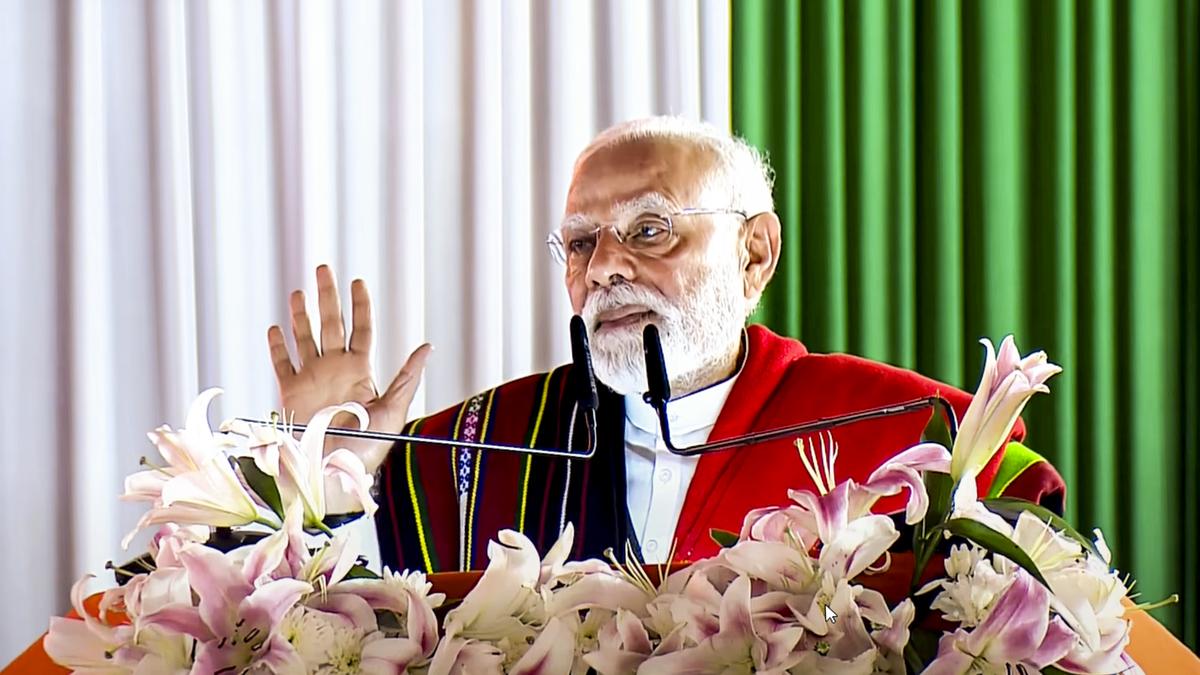
- 18 Sep 2025
In News:
Recently, Prime Minister Narendra Modi visited Imphal, Manipur, inaugurating and laying the foundation for multiple development projects aimed at improving infrastructure, governance, and socio-economic opportunities in the state.
The visit comes in the backdrop of ethnic tensions that erupted in May 2023 between the Meitei community in the Imphal valley and the Kuki-Zo tribes in the surrounding hills, which claimed over 250 lives and displaced more than 60,000 people.
Key Development Initiatives
- Infrastructure and Connectivity:
- Manipur Urban Roads Project: Investment of over ?3,600 crore to enhance urban road connectivity in Imphal.
- Jiribam–Imphal Railway Line: A ?22,000 crore project to connect Imphal to India’s national rail network.
- Imphal Airport Expansion: ?400 crore investment and inauguration of helicopter services to boost air connectivity.
- Civil Secretariat (?538 crore) and Police Headquarters (?101 crore) inaugurated to improve governance and law enforcement.
- Digital and IT Initiatives:Manipur Infotech Development Project aims to strengthen the state’s IT and startup ecosystem, creating employment and entrepreneurial opportunities.
- Women Empowerment:
- Four new Ima Markets (women-only markets) inaugurated, reinforcing the state’s tradition of women-led commerce.
- Construction of working women’s hostels at nine locations to support education and employment for women.
- Sports and Culture:
- Support for the National Sports University and Khelo India initiatives.
- Promotion of polo via the Marjing Polo Complex, featuring the world’s tallest polo statue.
Ethnic Conflict and Unresolved Issues
The conflict stems from the Meitei community’s demand for Scheduled Tribe (ST) status, opposed by Kuki-Zo groups. ST recognition would grant Meiteisconstitutional safeguards, including reservations in jobs, education, and political representation, and land rights in hill areas. Key unresolved issues include:
- Rehabilitation of Displaced Families: Over 280 relief camps sheltering around 57,000 people, some displaced for more than two years.
- Restrictions on Movement: Militarized buffer zones between valley and hill districts continue to limit free movement and access to services.
- Border Concerns: Porous border with Myanmar raises issues of cross-border migration, leading to the scrapping of the Free Movement Regime.
- Political Vacuum: The resignation of the Chief Minister and imposition of President’s Rule have created governance challenges.
- Dialogue Deficit: Despite reduced violence since late 2024, there is no sustained dialogue between Meitei and Kuki-Zo communities.
Demand for Separate Administration
The Kuki-Zo Council seeks administrative separation of hill areas as a Union Territory under Article 239A of the Constitution, while Meitei organizations like COCOMI oppose this, citing threats to territorial integrity.
Way Ahead
The Prime Minister emphasized the need to strengthen dialogue between the hill and valley districts to foster social harmony. Sustainable peace in Manipur requires:
- Inclusive dialogue and neutral mediation between Meitei and Kuki-Zo communities.
- Rehabilitation of displaced families with dignity and livelihood support.
- Balanced border management to address cross-border migration while respecting tribal ties.
- Strengthening local governance and administrative institutions to restore trust.
Strategic Significance
Infrastructure, IT, and women-centric initiatives are not only essential for socio-economic development but also align with the Act East Policy, facilitating regional integration and economic collaboration with Southeast Asia. Ensuring peace and development in Manipur is critical for maintaining national unity, regional stability, and long-term social cohesion.
CBSE Provides Partial Relief on APAAR ID Submission for Board Students
- 18 Sep 2025
In News:
The Central Board of Secondary Education (CBSE) has recently announced partial relaxations for schools regarding the submission of Automated Permanent Academic Account Registry (APAAR) IDs linked to the List of Candidates (LOC) for Classes 10 and 12 board examinations. The move comes in response to multiple representations from schools highlighting technical and administrative challenges.
About APAAR
APAAR, launched under the National Education Policy (NEP) 2020 and aligned with the National Credit and Qualifications Framework (NCrF), aims to assign every student in India a unique 12-digit lifelong academic identity. Key objectives include:
- Consolidation of all academic achievements, such as marksheets, certificates, and co-curricular accomplishments, in a single digital record.
- Facilitating credit transfers, mobility between institutions, and recognition of prior learning.
- Enhancing flexibility in education and supporting seamless integration with the Academic Bank of Credits (ABC).
Integration with Academic Bank of Credits
The Academic Bank of Credits (ABC), conceptualized under NEP 2020, serves as a digital repository of students’ academic records, enabling storage, transfer, and redemption of credits across recognized institutions. Integrated with APAAR, it allows students to move between schools and higher education institutions without repeatedly submitting physical certificates, thus promoting educational mobility and continuity.
Challenges in APAAR Implementation
Since its rollout, schools have reported several hurdles in generating APAAR IDs:
- Technical integration issues between school portals and the APAAR system.
- Mismatches between school records and Aadhaar-linked student data.
- Time delays due to correction or updating processes.
- Lack of parental consent, often arising from privacy concerns.
CBSE’s Guidelines and Partial Relaxations
To address these challenges, CBSE has provided the following instructions for schools while submitting LOCs:
- Parental Consent Denial: If APAAR IDs cannot be generated due to refusal of parental consent, schools must retain a copy of the consent refusal and mark the entry in the LOC as “REFUSED”.
- Technical or Other Issues: For IDs that cannot be generated due to technical or administrative reasons, schools should mark the LOC entry as “NOGEN”.
- All Other Cases: Wherever feasible, APAAR IDs should be indicated in the LOC.
CBSE has also activated an online module for Children With Special Needs (CWSN), enabling schools to apply for various examination-related exemptions. Examination forms for private candidates of Classes 10 and 12 have been consolidated along with the LOC submission schedule to ensure clarity and timely compliance.
Support Measures
CBSE has emphasized that these relaxations are intended to ensure smooth and error-free LOC submission within the stipulated timelines. Schools facing further difficulties are advised to reach out to their respective regional CBSE offices for assistance.
Significance
The APAAR initiative represents a key step toward a digital, lifelong academic identity for Indian students, enhancing transparency, mobility, and integration with the Academic Bank of Credits. CBSE’s temporary relaxations reflect a pragmatic approach to smooth implementation while addressing operational challenges faced by schools.
India’s Support for the Two-State Solution and UN Resolution on Palestine
- 18 Sep 2025
In News:
- India has reaffirmed its principled support for the peaceful resolution of the Israeli-Palestinian conflict by voting in favour of the United Nations General Assembly resolution endorsing the ‘New York Declaration’.
- The resolution, introduced by France, was adopted with 142 votes in favour, 10 against, and 12 abstentions. Countries opposing the resolution included the United States, Israel, Argentina, and Hungary.
- The declaration seeks collective international action to end hostilities in Gaza and to establish a just, lasting settlement through the effective implementation of the two-state solution. It explicitly calls on Israeli leadership to publicly commit to a sovereign and viable Palestinian state.
India’s Historical Stand on Palestine
India has consistently maintained a supportive stance toward Palestine. It was the first non-Arab country to recognize the Palestine Liberation Organization (PLO) in 1974 and formally recognized the State of Palestine in 1988. Over the years, India has voted in favour of multiple Palestinian resolutions at the UN, underlining its long-standing commitment to Palestinian statehood and sovereignty.
India’s support encompasses:
- Two-State Solution: Advocating peaceful coexistence of Israel and Palestine within secure, internationally recognized borders.
- East Jerusalem: Supporting its recognition as the capital of Palestine in line with UN resolutions.
- International Engagement: Supporting Palestine’s participation in global forums, including UNESCO and the UNGA observer state status (2012).
- Development Cooperation: Providing assistance worth approximately US$ 141 million for Palestinian projects, including contributions through the India-Brazil-South Africa (IBSA) Fund, which financed projects worth US$ 5 million.
India–Israel Relations and Strategic Balance
While maintaining historical support for Palestine, India has also nurtured a robust strategic partnership with Israel in defence, agriculture, innovation, and technology over the past three decades. This dual approach reflects India’s commitment to principled support for Palestine alongside a pragmatic partnership with Israel, balancing regional interests and global diplomacy.
India’s Advocacy at the UN
At multilateral forums, India has consistently emphasized:
- Rejection of violence and terrorism from both parties.
- Humanitarian assistance for civilians in Gaza.
- Diplomatic, peaceful resolution through dialogue and international cooperation.
High-level visits further reinforce India’s engagement: Prime Minister Narendra Modi visited Palestine in 2018, marking the first visit by an Indian Prime Minister, while former President Pranab Mukherjee visited in 2015.
Conclusion
India’s position on the Israeli-Palestinian conflict exemplifies a realist yet principled foreign policy. It underscores:
- Commitment to international law and the two-state solution.
- Balancing historical support for Palestine with deepening strategic relations with Israel.
- Advocating humanitarian aid, dialogue, and peaceful settlement as the cornerstone for regional stability.
India’s vote in favour of the UN resolution reaffirms its role as a responsible global actor promoting peace, justice, and sustainable development in West Asia.
Dongsha Islands
- 18 Sep 2025
In News:
Taiwan’s Coast Guard Administration (CGA) recently repelled both a Chinese coast guard ship and a Chinese fishing boat near the Dongsha Islands (Pratas Islands), highlighting escalating tensions in the South China Sea and the strategic significance of the region.
Key Highlights:
These confrontations coincided with China’s announcement of a national nature reserve at Scarborough Shoal, a territory also claimed by Taiwan and the Philippines. While Beijing described it as a conservation initiative, analysts view it as part of China’s broader strategy to assert control over disputed areas.
Taiwan condemned the repeated incursions, labeling them “grey zone tactics”—persistent, low-intensity actions aimed at exerting pressure without provoking direct military conflict. The CGA reaffirmed its commitment to defend Taiwan’s sovereignty, pledging ongoing patrols and surveillance in the Dongsha region.
About the Dongsha Islands:
- Located in the northern South China Sea, ~445 km southwest of Kaohsiung, Taiwan, and 320 km southeast of Hong Kong.
- Governed by Taiwan and staffed by marines, with no permanent civilian residents.
- Comprised of three formations: Dongsha Island (above sea level) and Northern and Southern Vereker atolls (below sea level).
- Circular coral atoll structure: reef flats span 24 km in diameter, enclosing a 16 km lagoon; Dongsha Island itself is ~1.6 km long and 0.8 km wide.
The incidents underscore the fragile security balance in the South China Sea, where overlapping territorial claims, strategic maritime routes, and China’s assertive posture pose ongoing regional challenges. Taiwan’s proactive coastal defense measures reflect its determination to safeguard administered territories.
Exercise SiyomPrahar
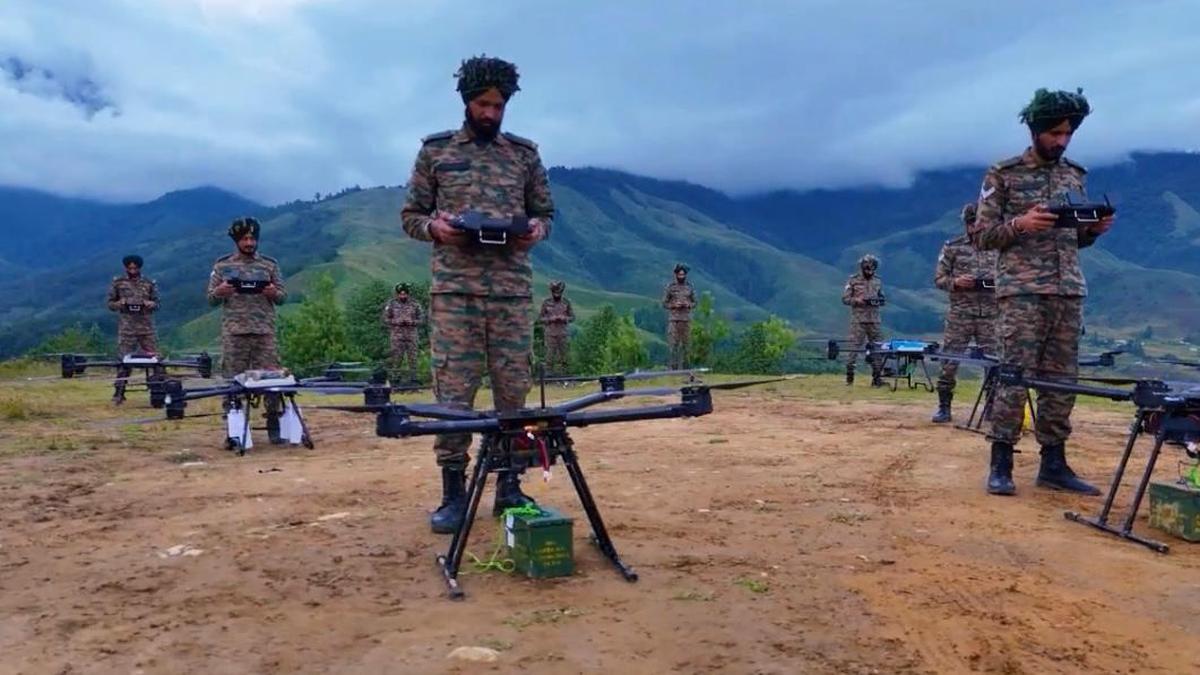
- 18 Sep 2025
In News:
The Indian Army's Exercise SiyomPrahar, represents a significant step in modernizing the Army’s operational capabilities. This field training exercise focused on validating the integration of unmanned aerial systems (UAS) into tactical operations, with a strong emphasis on surveillance, reconnaissance, target acquisition, and precision strikes. Below are the key highlights and insights from the exercise:
Key Objectives:
- Integration of Drone Technology: The core goal was to test how drone systems can be employed for persistent surveillance, battlefield reconnaissance, and precision strikes, thus enhancing overall combat effectiveness.
- Development of New TTPs (Tactics, Techniques, and Procedures): A key focus was on refining how drone-derived intelligence could be fused with conventional firepower, ensuring rapid decision-making in dynamic and evolving combat scenarios.
- Joint Targeting and Decision-making: The exercise aimed at refining joint targeting processes, highlighting the importance of real-time intelligence to improve targeting accuracy and decision-making speed in the heat of battle.
Key Features of the Exercise:
- Realistic Battlefield Conditions: The exercise was conducted under simulated real-world combat conditions, providing a comprehensive test of UAS capabilities in diverse operational environments.
- Synergy Between Traditional Combat and Emerging Technologies:Exercise SiyomPrahar underscored the importance of blending traditional combat arms with cutting-edge technologies, such as drones, to create a more adaptive and efficient military force.
- Operational Preparedness: The exercise was a significant step toward enhancing the Indian Army’s operational preparedness for future combat scenarios, integrating modern technology to ensure readiness for future battlefields.
Strategic Importance and Key Insights:
- Adaptability and Synergy: The exercise highlighted how the Army is integrating modern warfare tactics with traditional methods to create a more effective, adaptable force that can operate in dynamic and complex environments.
- Real-Time Data Utilization: By using drones to gather real-time intelligence, the Indian Army is significantly improving targeting accuracy, enabling faster, more informed decisions in combat situations.
- Reduced Soldier Risk: The deployment of drones for reconnaissance and strikes minimizes the exposure of ground troops to potential dangers, enhancing both tactical effectiveness and safety on the battlefield.
- Joint Operational Capabilities: Exercise SiyomPrahar demonstrated how drones can be integrated into joint operational structures, improving communication and coordination between various arms of the military.
Broader Implications for Future Warfare:
- Technological Innovation in Combat: The successful integration of drone technology in this exercise indicates a shift towards technology-driven warfare, where drones play a critical role in intelligence gathering, battlefield awareness, and precision targeting.
- India’s Commitment to Modernization: The exercise is a testament to India’s proactive approach to adapting to the changing nature of warfare, ensuring that its forces remain future-ready and capable of responding effectively to emerging security challenges.
Brown Trout
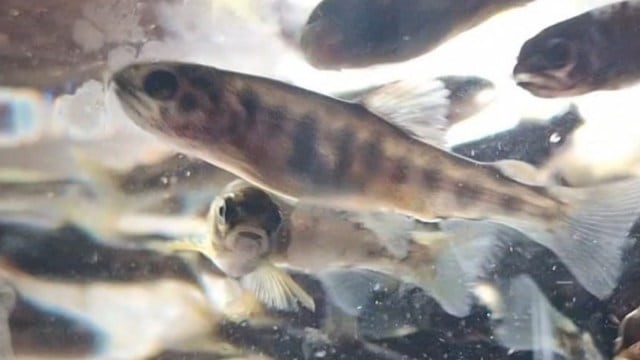
- 17 Sep 2025
In News:
- Kashmir is embarking on a significant initiative to revive its brown trout (Salmo trutta) population, a species first introduced to the Valley by the British in 1900.
- Once a hallmark of Kashmir’s cold-water streams and a popular game fish, the brown trout population had declined over decades due to unregulated angling, habitat degradation, and ecological disturbances.
- The Fisheries Department of Jammu & Kashmir plans to reintroduce the species into streams and lakes, aiming to combine conservation with tourism promotion.
About Brown Trout
- The brown trout is a cold-water, salmonid fish native to Europe, northern Africa, and parts of Asia. It prefers cool, well-oxygenated freshwater streams, often residing in crevices between boulders. Typically, individuals grow 15–22 inches in length and weigh 1–5 pounds.
- Brown trout are renowned as a game fish due to their aggressive and elusive nature, which makes angling challenging and rewarding.
- Globally, brown trout have been introduced widely as a game fish, but outside their native range, they are considered one of the world’s worst invasive species.
- In India, their introduction to Kashmir was facilitated by Frank J Mitchel, a British entrepreneur, and earlier attempts during Maharaja Pratap Singh’s era. The fish initially thrived in streams such as Panzagam, Lidder, Bringhi, and Ferozpora, eventually supporting recreational fishing and angling tourism.
Revival Initiative
The current revival project is supported under Pradhan Mantri Matsya Sampada Yojana (PMMSY) and J&K’s Holistic Agricultural Development Programme, enabling the import of 3 lakh pure brown trout eggs from Denmark. These were hatched at the Tchansar Hatchery in Kulgam, marking a milestone as previous efforts primarily focused on rainbow trout for food production rather than wild trout restoration.
Rearing brown trout posed unique challenges:
- They refuse artificial feed, requiring specially formulated diets of crustaceans mixed with cod liver oil.
- They feed in darkness, prompting hatchery modifications to simulate natural conditions and monitor feeding.
The October–November period, coinciding with their breeding season, was chosen for release as brown trout exhibit lower aggression and reduced cannibalism, increasing survival rates. Streams and lakes targeted for reintroduction include Veshav River and Kounsarnag Lake in Kulgam.
Ecological and Socioeconomic Significance
Reintroduction serves multiple purposes:
- Biodiversity restoration: Revives native aquatic fauna and strengthens freshwater ecosystems.
- Tourism enhancement: Brown trout are a draw for anglers, boosting local tourism and allied services.
- Heritage and culture: The initiative reconnects the Valley with a century-old ecological and recreational tradition.
Experts, however, caution that habitat preservation is crucial, emphasizing the need to control illegal riverbed mining and maintain clean, oxygen-rich streams for the trout’s survival.
Conservation Status and Global Context
According to the IUCN Red List, the brown trout is listed as Least Concern, reflecting its wide distribution and adaptability in native ranges. However, localized conservation efforts, such as this reintroduction in Kashmir, are essential to sustain ecologically and economically significant populations in specific regions.
Amrit Sarovar Mission
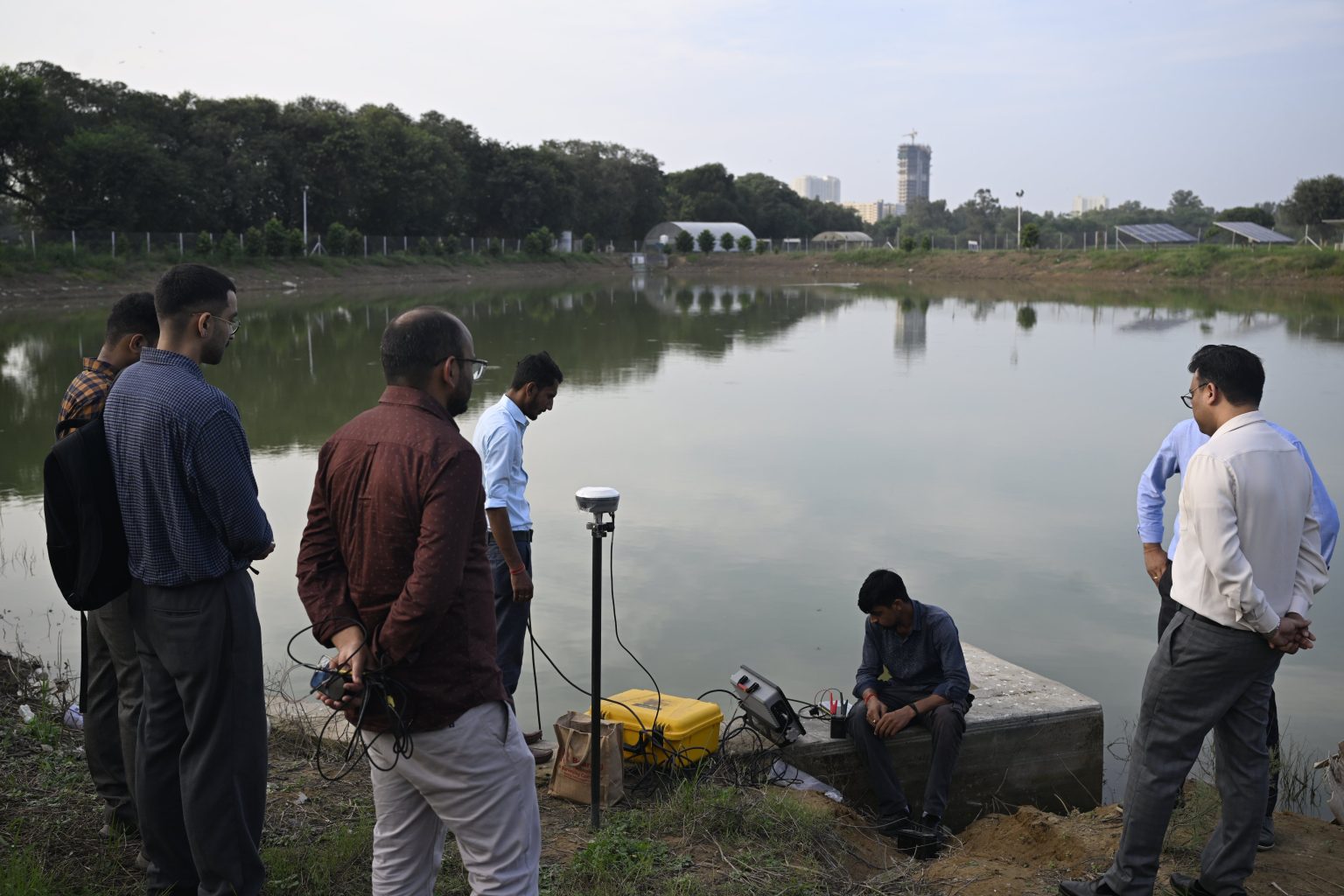
- 17 Sep 2025
In News:
- The Amrit Sarovar Mission, launched by Prime Minister Narendra Modi in April 2022, is a flagship initiative aimed at addressing water scarcity and promoting sustainable rural development across India.
- The mission seeks to construct or rejuvenate 75 Amrit Sarovars (ponds) in each district, as part of the celebrations of Azadi ka Amrit Mahotsav.
- As of 2025, the government has reported the creation of over 68,000 Amrit Sarovars nationwide, marking a significant milestone in water conservation and community engagement.
Objectives and Significance
The mission’s primary objectives include:
- Water conservation and management in rural areas.
- Enhancement of local livelihoods through irrigation, fisheries, duckery, cultivation of water chestnut, and water-based tourism.
- Promotion of social cohesion by establishing Amrit Sarovars as community gathering points.
- Integration of government initiatives through a “Whole of Government” approach, ensuring convergence of resources and expertise.
Each Amrit Sarovar is designed to have a minimum pondage area of one acre with a water-holding capacity of about 10,000 cubic metres. Surrounding vegetation typically includes trees such as Neem, Peepal, and Banyan, contributing to ecological sustainability and enhancing biodiversity.
Participatory and Institutional Framework
The site selection and supervision of Amrit Sarovars are conducted by Gram Sabhas, with Panchayat representatives overseeing the development. This participatory approach ensures that local communities have ownership and accountability for the maintenance and sustainable use of water resources.
The mission operates on convergence principles, utilizing funds and resources from multiple sources including:
- Mahatma Gandhi NREGS
- 15th Finance Commission Grants
- Pradhan Mantri Krishi Sinchai Yojana (PMKSY) sub-schemes, such as Watershed Development and Har Khet Ko Pani
- State government schemes
There is no separate financial allocation for the mission; rather, it leverages ongoing programs for maximum impact.
Technology and Monitoring
To ensure efficient implementation and progress tracking, the Bhaskaracharya National Institute for Space Applications and Geo-informatics (BISAG-N) has been engaged as a technical partner. The institute has developed the Amrit Sarovar Portal and Mobile App, which enables real-time monitoring, reporting, and evaluation of district-level activities.
Workshops and Capacity Building
The Ministry of Rural Development organized a national workshop in New Delhi to reinforce the mission’s technical foundations and promote community-driven sustainable practices. Officials from states and Union Territories discussed strategies to enhance technical capacity, innovation, and inter-departmental collaboration, paving the way for the next phase of the mission.
Impact and Prospects
The Amrit Sarovar Mission exemplifies integrated rural development, linking water security, ecological sustainability, and livelihood generation. By reviving traditional water bodies and creating new ponds, it contributes to groundwater recharge, climate resilience, and rural prosperity. The initiative also strengthens people’s participation in natural resource management, ensuring that water resources are used efficiently and sustainably.
As the mission progresses, it is expected to play a critical role in mitigating rural water crises, enhancing agricultural productivity, and fostering inclusive growth in India’s villages.
Erra Matti Dibbalu
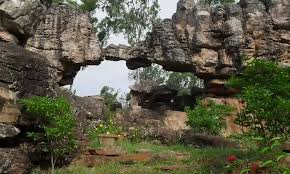
- 17 Sep 2025
In News:
Andhra Pradesh has taken a major step towards global heritage recognition with the inclusion of Erra Matti Dibbalu (Red Sand Dunes) near Visakhapatnam and the Natural Heritage of Tirumala Hills in the UNESCO Tentative List of World Heritage Sites. The move reflects India’s growing commitment to protect and preserve sites of geological and ecological importance. Being placed on the Tentative List is a mandatory prerequisite for eventual nomination to the UNESCO World Heritage List, symbolizing international acknowledgment of a site’s Outstanding Universal Value (OUV).
Erra Matti Dibbalu: India’s Rare Coastal Geo-Heritage Site
- Located along the coast near Visakhapatnam, Erra Matti Dibbalu—literally “Red Sand Dunes”—is a unique National Geo-heritage Monument, spread over 1,500 acres.
- The formations consist of sand, silt, and clay, with their deep red hue arising from natural oxidation over thousands of years.
- These dunes exhibit badland topography with striking geomorphic features such as gullies, buried channels, paired terraces, beach ridges, wave-cut terraces, knick points, and waterfalls.
- The site represents the late Quaternary geologic age and provides vital evidence of climatic and sea-level fluctuations over millennia. Dendritic drainage patterns and layered sediments at the site act as a natural archive of environmental changes and coastal evolution.
- First recorded in 1886 by British geologist William King, the site is globally rare — with only two similar formations identified, one in Sri Lanka and another in Tamil Nadu (Teri Sands).
- Additionally, archaeological artefacts discovered here point to Upper Palaeolithic human activity (around 20,000 BCE), making it an important cultural and scientific site.
- Recognizing its geological and historical significance, the Geological Survey of India (GSI) declared Erra Matti Dibbalu a National Geo-heritage Monument in 2016. However, experts warn that unregulated tourism and filming activities pose a threat to its fragile ecosystem, calling for stronger conservation and monitoring mechanisms.
- According to IUCN’s Geological World Heritage (2021) classification, the site may qualify under Theme 2: Tectonic System and Theme 7: Coastal System.
Tirumala Hills: A Geological and Ecological Treasure
- The Tirumala Hills in Tirupati district are celebrated not just for spiritual significance but also for their geological, ecological, and cultural heritage.
- The hills showcase the Eparchaean Unconformity—a rare geological boundary where 2.5-billion-year-old Archean rocks meet younger Proterozoic formations of the Cuddapah Supergroup. This boundary represents a vast time gap in Earth’s geological record, offering critical insights into planetary evolution.
- The site also houses the famous Natural Arch (Silathoranam), a naturally sculpted rock formation estimated to be 1.5 billion years old. The region forms part of the Seshachalam Biosphere Reserve and Venkateswara National Park, both home to rich biodiversity including endangered red sanders (Pterocarpus santalinus), Cycas beddomei, and the elusive Jerdon’s Courser.
- With dense forests, seasonal waterfalls, and unique geological formations, Tirumala Hills qualify under multiple UNESCO criteria related to natural beauty, ecological diversity, and geological significance. As per IUCN (2021), the site aligns with Theme 1: History of Planet Earth and Evolution of Life.
AI-Based Weather Forecasting for Agriculture
- 17 Sep 2025
In News:
India has launched a pioneering initiative that marks a paradigm shift in agricultural planning and climate risk management. The Ministry of Agriculture and Farmers’ Welfare (MoAFW) has implemented the country’s first-of-its-kind AI-based weather forecasting program aimed at empowering farmers with timely and accurate monsoon information. This initiative has reached 3.8 crore farmers across 13 states, positioning India as a global leader in applying artificial intelligence to agriculture.
Transforming Weather Forecasting through AI
Traditionally, Indian farmers depend heavily on the monsoon for Kharif cultivation — a critical determinant of rural livelihoods. Unpredictable rainfall patterns, intensified by climate change, have often disrupted sowing and crop management decisions. To address this, MoAFW harnessed artificial intelligence (AI) models to provide advance and localized monsoon forecasts, disseminated via SMS through the m-Kisan portal.
These AI-based monsoon forecasts were available up to four weeks earlier than usual, allowing farmers to make informed choices on what, when, and how much to plant. The initiative also ensured weekly forecast updates, especially during the 20-day pause in monsoon progression this year, helping farmers adjust operations accordingly.
AI Models and Technological Backbone
The forecasts were generated using a blend of two open-access AI models:
- Google’s Neural General Circulation Model (Neural GCM), and
- ECMWF’s Artificial Intelligence Forecasting System (AIFS) developed by the European Centre for Medium-Range Weather Forecasts.
Rigorous evaluation showed that these models outperformed traditional meteorological forecasts, particularly in predicting the onset and variability of monsoon rainfall at local levels. The initiative represents the first targeted dissemination of AI-based weather forecasts to farmers anywhere in the world.
m-Kisan Portal
The m-Kisan Portal serves as the digital backbone for this outreach. It enables government agencies and research institutions to deliver customized, location-specific, and language-tailored SMS advisories to farmers. Beyond weather forecasts, it also provides guidance on pest management, crop practices, and government schemes, thus strengthening the digital extension ecosystem in Indian agriculture.
Bairabi–Sairang Project
- 17 Sep 2025
In News:
The inauguration of Mizoram’s first-ever railway line — the Bairabi–Sairang Broad-Gauge Project — marks a historic milestone in the state’s connectivity and India’s Act East Policy. Prime Minister Narendra Modi inaugurated the 51.38-km line, constructed at a cost of ?8,070 crore, connecting Mizoram’s capital Aizawl to the national railway network for the first time.
A 15-Year Vision Realised
- Sanctioned in 2008–09 and launched for construction in 2015, the project exemplifies one of the most complex undertakings of the Indian Railways due to Mizoram’s mountainous terrain and fragile geology.
- Nearly 54% of the alignment passes through tunnels and bridges, making it a remarkable feat of engineering. The route comprises 45–48 tunnels, 142 bridges (including 55 major and 87 minor ones), and 10 road overpasses/underpasses.
- Among its iconic structures is Bridge No. 144 (or 196) near Sairang, which stands over 104–114 metres tall, surpassing the height of Delhi’s Qutub Minar and making it India’s tallest pier railway bridge.
- The project also introduced four new stations — Hortoki, Kawnpui, Mualkhang, and Sairang — linking remote communities and enhancing regional mobility.
Connecting Aizawl to the National Network
The line stretches from Bairabi on the Assam–Mizoram border to Sairang, located just 20 km from Aizawl, thereby integrating Mizoram’s capital into India’s railway map. With this, Aizawl becomes the fourth northeastern capital (after Guwahati, Agartala, and Itanagar) to gain direct rail connectivity, strengthening socio-economic linkages between the Northeast and the rest of India.
Boosting Regional Connectivity and Economic Growth
The newly inaugurated line will facilitate safe, efficient, and cost-effective transportation, reducing travel time and improving the movement of goods such as food grains, fertilizers, and essential commodities. It is also expected to stimulate tourism, horticulture, and local industries, generating employment and boosting livelihoods.
The Prime Minister also flagged off three new long-distance train services —
- Sairang–Delhi Rajdhani Express,
- Sairang–Guwahati Express, and
- Sairang–Kolkata Express —further enhancing the state’s integration with major urban centres.
Engineering Challenges and Innovations
Constructing railways across Mizoram’s steep ridges and fragile hills required advanced tunnelling techniques and innovative stabilization methods. Engineers had to solidify loose sand into rock formations before tunnelling. The passenger trains can now run at speeds up to 100 km/h, reflecting the project’s high safety and design standards.
Complementary Infrastructure Initiatives
Alongside the rail inauguration, infrastructure projects worth ?9,000 crore were launched under schemes like PM-DevINE and NESIDS, including:
- Aizawl Bypass Road (45 km),
- Thenzawl–Sialsuk Road, and
- Khankawn–Rongura Road, aimed at improving connectivity for farmers, traders, and industries.
Additionally, the Chhimtuipui Bridge under the Kaladan Multimodal Transit Project, an LPG bottling plant at Mualkhang, sports complexes, and Eklavya residential schools were announced to promote economic growth and human development.
Strategic and Policy Significance
The Bairabi–Sairang line is a critical component of India’s Act East Policy, designed to enhance connectivity and integration of the Northeast with Southeast Asia. It embodies India’s commitment to balanced regional development, national security, and border area empowerment.
By overcoming formidable terrain and logistical hurdles, the project stands as a testament to India’s infrastructural capabilities and its vision for an inclusive, connected, and self-reliant Northeast.
STAR Missile
- 16 Sep 2025
In News:
India has developed the Supersonic TARget (STAR) missile — an indigenous, reusable high-speed target system designed to reproduce modern cruise-missile and anti-ship threat profiles for realistic training and validation of sensors, weapons and doctrines. STAR replaces expensive imported target systems and fills a critical gap in live realistic training for the Navy, Air Force and Army.
What STAR does
STAR is not a combat weapon but a high-fidelity aggressor platform that simulates hostile supersonic missiles so air defence systems, shipborne weapons and interceptor pilots can practise time-critical engagements under realistic conditions. It can mimic sea-skimming runs, steep dives and evasive manoeuvres to test detection, tracking and interception chains end-to-end.
Key technical features
- Propulsion: Two-stage system — a solid booster for launch followed by a Liquid Fuel Ramjet (LFRJ) for sustained supersonic cruise. The ramjet experience is also being matured for future systems (e.g., Astra Mk-3 development).
- Speed: Mach 1.8–2.5 (roughly 612–850 m/s).
- Altitude & profiles: Operates from low sea-skimming heights (as low as ~12 feet above water) up to ~10 km, and can execute high-speed dives and complex manoeuvres.
- Range & flight time: Designed for missions between 55–175 km with flight durations of ~50–200 seconds, enabling diverse scenario replication.
- Variants:
- Air-launched STAR (carried by combat aircraft such as LCA Tejas) to emulate air-to-air or air-to-ground supersonic threats and anti-radar/anti-AWACS profiles.
- Ground-launched STAR (truck-mounted) for shore-based or remote launches without extensive infrastructure.
- Operational utility: High manoeuvrability, programmable trajectories and safe recovery/destruction options make it suitable for repeated use in trials.
Operational and strategic significance
- Realism in training: STAR provides time-critical, live target practice that simulations alone cannot offer — particularly valuable against low-altitude, high-speed cruise profiles which compress engagement timelines.
- Atmanirbhar Bharat: Fully indigenous development reduces dependency on foreign target systems, cuts recurring costs, and supports domestic missile-R&D ecosystems. STAR is reusable and cost-effective relative to imported alternatives.
- Force integration: Its modular design serves tri-service needs, helping calibrate ship radars, point-defence systems, interceptor missiles, and fighter tactics in joint exercises.
- R&D multiplier: The ramjet and guidance technologies validated on STAR feed into broader missile-development programs, strengthening long-term indigenous capabilities. Analysts also view STAR as a potential seed technology that could be adapted into tactical offensive roles in the future (e.g., anti-radar or precision suppression platforms), should doctrinal decisions and legal frameworks permit.
Development status and outlook
As of mid-2025, STAR progressed into advanced development and flight validation phases — integrating propulsion, guidance and control subsystems and conducting combat-style trials. Operational induction for routine service trials and training is anticipated as tests mature.
Cicadas
- 16 Sep 2025
In News:
The recent reappearance of cicadas in Kerala’s Silent Valley National Park — after decades of absence — has intrigued ecologists. It is being seen both as a possible indicator of ecosystem recovery and as a warning signal of ecological disruption caused by climate change and habitat alteration.
About Silent Valley
Located in the Nilgiri Hills of Kerala’s Western Ghats, Silent Valley National Park spans about 90 sq. km and represents one of India’s most pristine tropical rainforests. The forest’s name owes itself to the striking absence of cicada calls, which are ubiquitous in most tropical forests. The absence of these insects — known for their high-decibel songs — was noted as early as the 1840s by British botanist Robert Wight, making it an ecological enigma.
Understanding Cicadas
Cicadas are hemipteran insects recognized for their loud, species-specific acoustic signals. They spend most of their lives underground as nymphs, feeding on tree root sap, before emerging for a short adult phase primarily to mate.
- Habitat: Mostly canopy dwellers in natural forests with mature trees.
- Types:
- Annual cicadas – emerge every year in summer, often camouflaged among trees.
- Periodical cicadas – emerge collectively after 13 or 17 years of dormancy.
- Ecological Roles:
- Aerate soil and enhance nutrient cycling.
- Serve as prey for birds, reptiles, and mammals.
- After death, their bodies enrich soil nitrogen, aiding forest regeneration.
The Mystery of Silence
Unlike most tropical forests, Silent Valley lacked the characteristic cicada chorus. Scientists have proposed several hypotheses for this anomaly:
- Microclimate Conditions: The valley’s bowl-shaped topography, constant mist, and moisture-rich soils may hinder nymph development that prefers drier soil.
- Vegetation Composition: Unique tree species and leaf litter dynamics may not support cicada life cycles.
- Historical Climatic Shifts: Subtle long-term climate variations might have altered habitat suitability.
- Natural Absence Hypothesis: Cicadas may never have colonized this particular ecosystem in significant numbers.
Return of the Cicadas
Recent field surveys and local observations indicate a gradual resurgence of cicada populations in certain forest patches.
- Possible Causes:
- Shifts in vegetation structure and canopy composition.
- Rising temperatures and erratic rainfall patterns altering habitat conditions.
- Natural dispersal from adjoining forest landscapes.
Ecological and Conservation Implications
The reappearance of cicadas serves as a bioindicator — revealing subtle ecological shifts often invisible to human monitoring.
- It may represent resilience and natural regeneration following decades of conservation success since the 1984 ban on the Silent Valley hydroelectric project.
- Alternatively, it might indicate climate instability and biodiversity imbalance, as species distributions shift in response to anthropogenic pressures.
Silent Valley’s surrounding areas now face deforestation, plantation expansion, and tourism pressure, threatening its delicate ecological balance. Continuous long-term monitoring of insect diversity, vegetation, and microclimate is essential to interpret whether this trend marks recovery or disruption.
Revisiting the Right to Information (RTI) in the Age of Data Protection

- 16 Sep 2025
In News:
The recent amendment to the Right to Information (RTI) Act, 2005 through the Digital Personal Data Protection (DPDP) Act, 2023 has sparked an intense debate on the balance between citizens’ right to information and the right to privacy. Critics argue that the change could transform India’s celebrated transparency law into a “Right to Deny Information”, undermining democratic accountability.
Evolution and Purpose of the RTI Act
- Enacted in 2005, the RTI Act is one of India’s most significant democratic reforms, aimed at promoting transparency, accountability, and citizen empowerment. It gives citizens the legal right to access information from public authorities, including government ministries, departments, and publicly funded organizations.
- Under the Act, public authorities are required to respond within 30 days to RTI requests. It also imposes penalties on officials who fail to provide information without valid reasons. Exemptions are limited to cases involving national security, confidential investigations, or information that could endanger individuals’ safety.
- The RTI rests on a foundational democratic principle — information held by the government belongs to the people. The state is merely a custodian of this information, accountable to citizens.
Amendment Through the DPDP Act, 2023
- Earlier, Section 8(1)(j) of the RTI Act permitted the disclosure of personal information if such disclosure served a larger public interest, such as exposing corruption or verifying implementation of welfare schemes.
- The DPDP Act, 2023 amended this clause, removing the public interest override and prohibiting disclosure of personal data altogether, even if it relates to public officials, unless legally mandated. This change effectively creates a blanket exemption for “personal information,” narrowing citizens’ access to critical public records.
Government’s Rationale
The Union government defends the amendment as an attempt to harmonize two fundamental rights —
- The Right to Privacy under Article 21, recognized by the Supreme Court in Justice K.S. Puttaswamy (2017), and
- The Right to Information under Article 19(1)(a).
According to the government, Section 8(2) of the RTI Act still allows disclosure if public interest outweighs privacy concerns, maintaining an “appropriate balance.” Officials argue that the amendment merely removes redundancy and ambiguity between the RTI and DPDP frameworks.
Criticisms and Concerns
However, legal experts, activists, and journalists warn that the amendment tilts the balance heavily toward secrecy, undermining the RTI’s original spirit.
- Dilution of Transparency:Without the “public interest” clause, authorities can refuse disclosure of crucial information, limiting citizens’ ability to scrutinize governance, corruption, or misuse of power.
- Broad Definition of ‘Personal Data’:The DPDP Act defines personal data expansively, enabling arbitrary denials of RTI requests, even for information concerning public servants’ official actions, assets, or decisions.
- Threat to Democratic Oversight:The amendment risks converting RTI from a tool of empowerment into a bureaucratic shield, curbing social audits and investigative journalism.
- Conflict with RTI’s Objective:The RTI was intended to shift power from public officials to citizens. Restricting access reverses this power dynamic, eroding democratic participation and accountability.
Judicial and Institutional Perspectives
- Justice K.S. Puttaswamy (Retd.) vs Union of India (2017):The Supreme Court upheld privacy as a fundamental right but emphasized it is not absolute and must be balanced with other rights, including transparency and public accountability.
- Supreme Court vs Subhash Chandra Agarwal (2019):The Court ruled that the office of the Chief Justice of India is subject to RTI and that judges’ asset declarations must be disclosed, reinforcing the primacy of public interest in promoting accountability.
- Justice A.P. Shah Committee on Privacy (2012):The expert group explicitly recommended that any privacy law should not dilute or override the RTI Act, asserting that transparency and privacy are complementary, not conflicting, principles.
Recommendations for Balance
- Narrow Definition of Personal Information:Limit exemptions only to information that genuinely compromises privacy, while allowing disclosure of public officials’ professional conduct, assets, and decisions.
- Training for Public Information Officers (PIOs):To ensure they interpret privacy clauses correctly and maintain the transparency-privacy balance.
- Strengthening Information Commissions:Empower Central and State Information Commissions with greater capacity and independence to adjudicate privacy-related disputes.
- Periodic Review:Establish a parliamentary oversight committee to review the impact of privacy laws on the RTI regime.
World’s First AI “Minister”
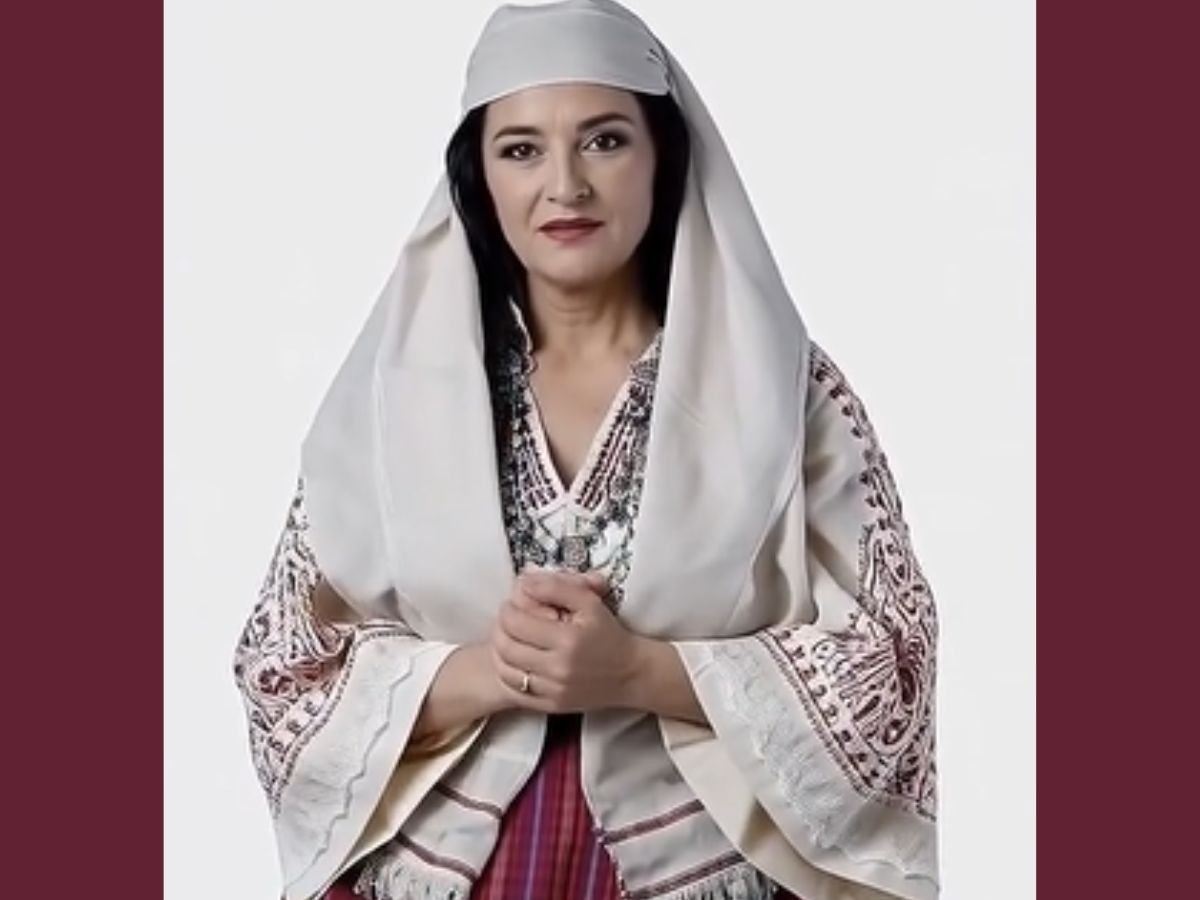
- 16 Sep 2025
In News:
In a historic first, Albania has appointed an AI-generated digital minister, named “Diella” (meaning ‘Sun’), to lead the country’s fight against corruption. The move, announced by Prime Minister Edi Rama, marks a pioneering experiment in AI-led governance, placing Albania at the forefront of the global debate on the use of artificial intelligence in public administration.
Background and Context
Albania has long struggled with systemic corruption, especially in public tenders, which have been at the centre of several high-profile scandals involving money laundering and organised crime. In response, the government has adopted an innovative approach — deploying AI to ensure transparency and accountability in governance.
Initially launched in January 2025, Diella began as an AI-powered virtual assistant helping citizens navigate e-Albania, the government’s online service portal. Dressed in traditional Albanian attire, the avatar symbolised the fusion of technology and national identity.
Following its successful trial, Diella has now been elevated to the rank of a “Digital Minister”, tasked with:
- Overseeing all public tenders, ensuring they are 100% corruption-free.
- Auditing tender decisions using data-driven algorithms for transparency.
- Recruiting global talent to strengthen Albania’s anti-corruption efforts.
- Promoting the digitisation of governance for efficiency and trust-building.
Ethical and Governance Concerns
While Diella’s appointment marks a milestone, it also highlights challenges associated with AI in governance:
- Bias and Discrimination: AI systems trained on flawed data may perpetuate societal biases.
- Accountability Gap: Ambiguity persists over who bears responsibility for AI-driven decisions — developers, operators, or governments.
- Data Privacy: Despite digital data laws, sensitive citizen information remains vulnerable.
- Job Displacement: Automation risks replacing administrative and clerical roles.
- Overdependence on Technology: Excessive reliance may undermine human judgment and empathy.
- Cybersecurity Threats: AI platforms are prone to hacking and data manipulation.
- Digital Colonization: Over-reliance on foreign AI technologies could erode national sovereignty.
India’s AI Governance Landscape
India has emerged as a global AI powerhouse through proactive policy initiatives:
- IndiaAI Mission (2024): ?10,300 crore initiative for AI research and common computing facilities (18,693 GPUs).
- BharatGen: First government-funded multimodal LLM (Large Language Model).
- Sarvam-1: Indigenous LLM supporting 10 major Indian languages (2 billion parameters).
- Hanooman’s Everest 1.0: Supports 35 Indian languages, expanding to 90.
- AI Centres of Excellence: Promoting innovation and AI startups nationwide.
- Digital Public Infrastructure (DPI): Integrates Aadhaar, UPI, DigiLocker, and AI solutions for efficient service delivery.
- e-Courts Phase III: Uses AI for smart case management and administrative reforms.
Nepal’s First Woman Prime Minister
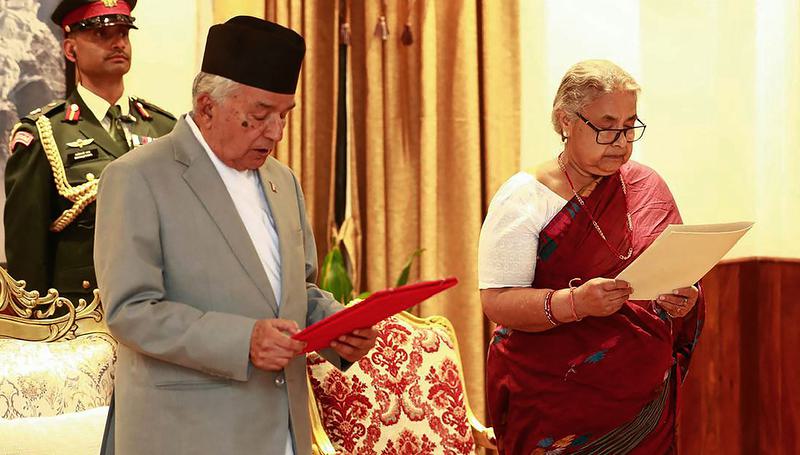
- 16 Sep 2025
In News:
Nepal has entered a crucial phase of political transition with the appointment of Sushila Karki, former Chief Justice and now the country’s first woman Prime Minister. President Ram Chandra Poudel administered the oath of office after dissolving Parliament and announcing fresh elections for March 5, 2026, marking a historic moment in Nepal’s democratic evolution.
Background: Political Turmoil and Gen Z-Led Movement
The decision came amid widespread Gen Z-led protests against former Prime Minister K.P. Sharma Oli, whose administration was accused of corruption, authoritarianism, and a social media ban that triggered nationwide unrest.
Facing pressure from the streets, the military, and constitutional experts, President Poudel dissolved the House and endorsed Karki’s appointment — a move described as a “remedial measure” during a political crisis. The protests, dominated by youth and digital activists, reflected a broader demand for accountability, transparency, and generational change in Nepal’s governance.
Sushila Karki: A Symbol of Integrity and Democratic Renewal
Aged 73, Sushila Karki is widely regarded as an upright and anti-corruption crusader. She holds a Master’s degree in Political Science from Banaras Hindu University and a Law degree from Tribhuvan University. As Nepal’s first female Chief Justice (2016–17), she was known for her fearless stance against corruption and political interference in the judiciary.
Her appointment as interim Prime Minister is supported by protesters, the Army, and civil society, who view her as a neutral and reformist leader capable of restoring trust in institutions. Her immediate mandate includes:
- Restoring law and order and maintaining peace amid political uncertainty.
- Investigating the September 8 violence and prosecuting those responsible for civilian deaths and attacks on state infrastructure.
- Overseeing the 2026 general elections and ensuring a peaceful, transparent transfer of power.
- Initiating constitutional reforms to strengthen democratic accountability.
Constitutional and Institutional Context
Although some questioned the legality of appointing a non-political figure as Prime Minister following Parliament’s dissolution, constitutional experts assert the decision falls within emergency democratic legitimacy, given the scale of the crisis. The Nepal Army played a stabilizing role throughout the unrest, mediating between the President’s Office and the protesters to ensure an orderly transition.
India–Nepal Relations: Context and Continuity
India welcomed Karki’s appointment, emphasizing stability, peace, and partnership under the ‘Neighbourhood First’ Policy. Nepal’s political stability is vital for India due to geostrategic, cultural, and economic interlinkages.
1. Geopolitical Significance:Nepal shares borders with five Indian states — Sikkim, West Bengal, Bihar, Uttar Pradesh, and Uttarakhand. Situated between India and China, it holds strategic importance in South Asian geopolitics.
2. Defence& Security Cooperation:India and Nepal share deep military ties, including the long-standing tradition of conferring honorary ranks on each other’s Army Chiefs. The Gorkha Regiment further symbolizes this enduring relationship based on mutual respect and trust.
3. Economic and Developmental Partnership:India remains Nepal’s largest trade and investment partner, accounting for over 64% of its trade and 33.5% of total FDI (USD 670 million). Bilateral trade stood at USD 8.85 billion in FY 2022–23, with India importing surplus electricity from Nepal.
India also provides 1,500+ scholarships annually under ITEC and other programs, supporting Nepal’s human resource development.
4. Cultural and People-to-People Ties:The countries share civilizational and religious linkages, exemplified by sites like Pashupatinath Temple (Kathmandu), Janakpur (birthplace of Sita), and Bodh Gaya (India). Over 8 million Nepalis live and work in India, deepening cross-border social integration.
India–Mauritius Relations
- 15 Sep 2025
In News:
- India and Mauritius share a unique relationship anchored in history, culture, and strategic convergence in the Indian Ocean Region (IOR). The visit of Mauritius Prime Minister Navinchandra Ramgoolam to Varanasi in 2025 marked a new milestone, with India announcing a USD 680 million Special Economic Package.
- The package seeks to strengthen bilateral cooperation in infrastructure, defence, maritime security, and cultural ties, while reinforcing India’s role as a key development and security partner in the region.
Key Features of the Special Economic Package (2025)
- Infrastructure Development: At least 10 projects, including completion of the new Air Traffic Control (ATC) tower at SSR International Airport, expansion of highways and ring roads, and the development of Motorway M4.
- Healthcare & Education: Establishment of new schools and hospitals.
- Maritime Cooperation: Redevelopment of Port Louis into a stronger maritime hub, and agreements on hydrography for joint surveys and navigation charts of Mauritius’ Exclusive Economic Zone (EEZ).
- Chagos Archipelago Engagement: In-principle agreement for joint surveillance of the Chagos Marine Protected Area, where the Diego Garcia base (operated by the US-UK) is located. India strongly backed Mauritius’ sovereignty claims, consistent with its support for decolonisation.
- Trade Facilitation: Bilateral trade in local currencies to be enabled, following the launch of UPI and RuPay cards in Mauritius.
- Security Partnership: India reaffirmed its role as Mauritius’ “first responder” and “net security provider” in the Indian Ocean, providing hydrographic support, refitting Mauritius Coast Guard ships, and training personnel.
Historical and Cultural Ties
- Migration: Indian migration to Mauritius began under French rule (1700s) and intensified during British rule post-1834, when nearly 500,000 indentured labourers arrived, most of whom settled permanently.
- Demographics: Today, about 70% of Mauritius’s population (1.2 million) is of Indian origin, strengthening cultural and familial bonds.
- National Day: Mauritius celebrates its National Day on March 12, coinciding with Mahatma Gandhi’s Dandi March, reflecting its deep-rooted civilizational connect with India.
Economic and Commercial Relations
- Trade: In FY 2022–23, bilateral trade stood at USD 554.19 million, with Indian exports at USD 462.69 million.
- FDI: Mauritius remains a significant investor in India—second-largest source of FDI (FY 2023–24) after Singapore.
- CECPA (2021): The Comprehensive Economic Cooperation and Partnership Agreement was India’s first trade agreement with an African country, expanding market access in goods, services, and investment.
- DTAA (1982): While the Double Taxation Avoidance Agreement facilitated investments, it also raised concerns of misuse for money laundering and round-tripping.
Defence and Security Cooperation
- India is Mauritius’ preferred defence partner, supplying platforms like Dornier aircraft and Advanced Light Helicopters (Dhruv), along with a USD 100 million Line of Credit for defence procurement.
- Joint patrolling, hydrographic surveys, and capacity building highlight the depth of security ties.
- The Agaléga Island Projects (airstrip and jetty, inaugurated in 2024) enhance maritime domain awareness and India’s strategic reach in the southwest Indian Ocean.
Strategic Significance of Mauritius for India
- Geopolitical Location: Mauritius, located 800 km east of Madagascar, is a crucial node for maritime security and trade in the Indian Ocean.
- Countering China: China’s growing influence, marked by its 2021 FTA with Mauritius under the Belt and Road Initiative (BRI), necessitates stronger India–Mauritius collaboration.
- Blue Economy: Mauritius’ EEZ expansion (post-treaty with the UK over Chagos) provides new opportunities in fisheries, offshore energy, and maritime resources, where India is a preferred partner.
- Regional Cooperation: Mauritius is active in the Indian Ocean Rim Association (IORA), aligning with India’s SAGAR vision—“Security and Growth for All in the Region”—and Vision MAHASAGAR.
Sarcoidosis
- 15 Sep 2025
In News:
- Sarcoidosis is a chronic inflammatory diseasecharacterised by the formation of granulomas—small clusters of immune cells—in multiple organs, most commonly the lungs and lymph nodes.
- The condition has a highly variable clinical course, ranging from asymptomatic or mild presentations to severe, life-threatening complications.
- Recent peer-reviewed studies, including those published in Nature Reviews Disease Primers,emphasise the importance of early diagnosis, timely intervention, and awareness of risk factors in improving patient outcomes.
Causes and Risk Factors
- The exact cause of sarcoidosis remains unknown, but evidence points towards a combination of genetic susceptibility, immune system overactivity, and environmental triggers.
- Possible stimuli include bacteria, viruses, dust, and chemical exposure. Certain gene variations may predispose individuals, with the immune system reacting abnormally, leading to chronic inflammation and granuloma formation.
Symptoms and Clinical Manifestations
Symptoms vary depending on organ involvement:
- Pulmonary (most common): persistent cough, shortness of breath, chest pain; advanced cases may progress to pulmonary fibrosis and respiratory failure.
- Skin: rashes, bumps, or nodules; tender sores (erythema nodosum).
- Eyes: redness, pain, blurred vision.
- Cardiac: irregular heartbeats, heart failure.
- Neurological: seizures, facial paralysis, or peripheral nerve damage.
Some patients remain asymptomatic, with the disease detected incidentally during routine examinations.
Diagnosis
Diagnosis requires a combination of clinical evaluation, imaging, and biopsy.
- Chest X-rays/CT scans often reveal characteristic granuloma patterns.
- Biopsy confirms non-caseating granulomas, distinguishing sarcoidosis from infections and malignancies.
- Blood tests and lung function tests help assess disease activity and organ damage.
Treatment Approaches
There is no definitive cure for sarcoidosis, but management depends on severity and organ involvement:
- Mild/asymptomatic cases: often require only observation and regular monitoring.
- Moderate to severe cases: treated with corticosteroids (e.g., prednisone) to suppress inflammation.
- Refractory cases: immunosuppressive agents (methotrexate, azathioprine) or biologic therapies targeting immune pathways.
Long-Term Outlook
The prognosis is highly variable:
- Many cases resolve spontaneously within a few years.
- Others may become chronic, causing permanent lung scarring, cardiac complications, or organ dysfunction.
- Early detection and continuous monitoring remain critical to preventing irreversible damage.
Public Health Relevance
Sarcoidosis highlights the complex interaction between genetics, immunity, and environment. Its unpredictable nature underlines the need for:
- Awareness campaigns for early recognition of symptoms.
- Strengthening diagnostic infrastructure in primary healthcare.
- Research on genetic predispositions and immunological mechanisms to develop targeted therapies.
Doctrine of Contributory Negligence

- 15 Sep 2025
In News:
The Andhra Pradesh High Court has recently clarified that the doctrine of contributory negligence cannot be invoked as a defence in criminal prosecutions. It held that a person driving rashly and negligently, causing death, will be held liable under Section 304A of the Indian Penal Code (IPC), even if the victim was partly negligent. This landmark ruling reinforces the distinction between civil liability for damages and criminal liability for offences.
Doctrine of Contributory Negligence: Concept
- Contributory negligence rests on the principle that every individual must exercise reasonable care for their own safety.
- If an injured party’s negligence contributes to the harm, they may be considered partly responsible.
- The doctrine stems from the legal maxim “Volenti non fit injuria” — one who consents to risk cannot later claim damages.
- Example: If a pedestrian crosses the road carelessly and is hit by a rash driver, the pedestrian’s conduct may reduce their claim for compensation in civil law.
Civil Law vs. Criminal Law Application
- Civil Law:
- Contributory negligence acts as a defence, reducing damages payable by the defendant.
- Indian courts often apply the principle of comparative negligence, apportioning liability based on the degree of fault of each party.
- Burden of proof lies on the defendant to show that the plaintiff’s negligence contributed to the harm.
- Criminal Law:
- The AP High Court clarified that contributory negligence is not a defence to criminal liability.
- Section 304A IPC punishes causing death by rash or negligent act, irrespective of victim’s conduct.
- Even if the victim was negligent, the accused cannot escape responsibility if their rashness directly caused the death.
Judicial Reasoning and Precedent
- Criminal liability is premised on breach of legal duty and societal responsibility, not merely individual claims of fairness.
- If contributory negligence were allowed as a defence in criminal law, it could dilute accountability and weaken deterrence against rash driving.
- By upholding strict liability under Section 304A IPC, the court reinforced that public safety outweighs individual contributory fault.
Indian Legal Position
- India does not have a codified statute on contributory negligence; instead, principles are derived from common law and judicial interpretation.
- In civil cases, courts exercise discretion to distribute damages fairly.
- In criminal prosecutions, however, the focus remains on the offender’s culpability, not the victim’s carelessness.
Significance of the Ruling
- Public Safety: Strengthens accountability for rash driving and negligent acts, a major cause of road fatalities in India.
- Doctrinal Clarity: Clearly separates the scope of contributory negligence in civil law from its inapplicability in criminal law.
- Victim-Centric Approach: Ensures justice is not denied to victims’ families on grounds of partial fault.
- Judicial Consistency: Aligns with the principle that criminal law serves deterrence and social protection, unlike civil law which primarily compensates.
Border Wing Home Guards
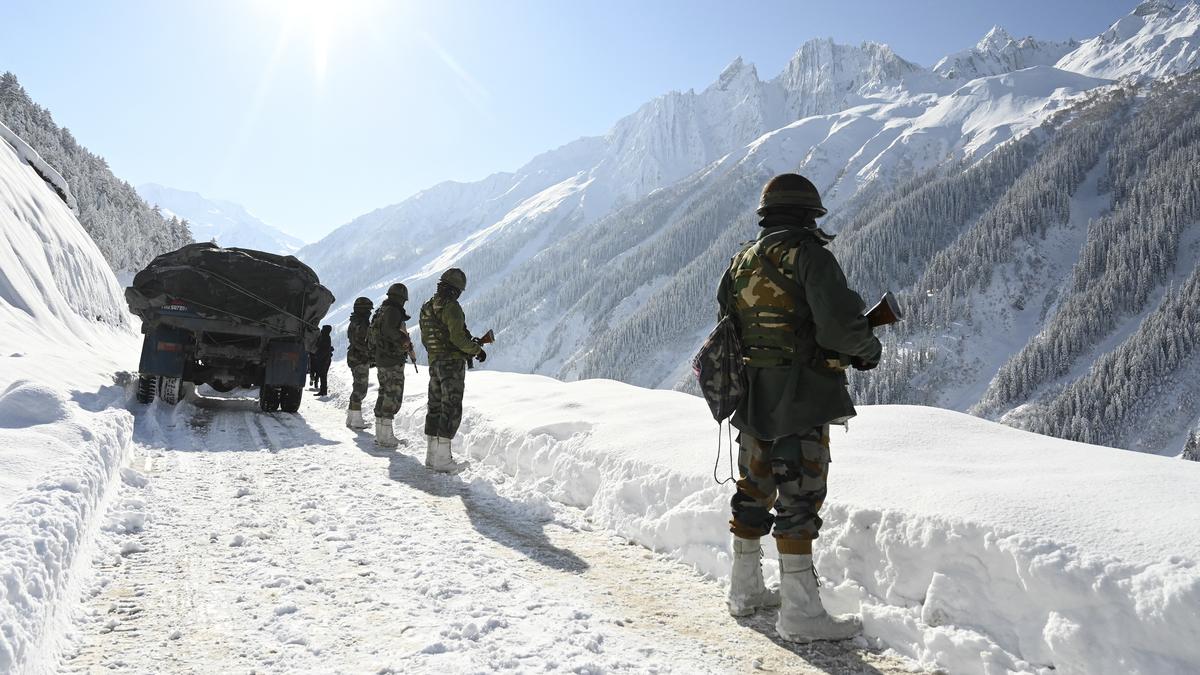
- 15 Sep 2025
In News:
The Union Ministry of Home Affairs (MHA) is contemplating the deployment of Border Wing Home Guards (BWHG) along the India–China border, on the lines of their existing role along the India–Pakistan border. This move reflects India’s evolving approach to border management, civilian participation in security, and augmentation of regular forces like the Indo-Tibetan Border Police (ITBP).
About Border Wing Home Guards (BWHG)
- Legal Framework: Home Guards are constituted under the Home Guards Act and Rules of States/Union Territories.
- Authorised States: Seven states have been authorised to maintain BWHGs — Meghalaya, Tripura, Assam, West Bengal, Punjab, Rajasthan, and Gujarat.
- Current Status: Presently, Rajasthan is the only state with active BWHGs.
- Tenure & Duties: Members are usually enlisted for 3–4 years, perform responsibilities similar to police constables, and receive training with 25% of costs borne by the Central Government.
Recruitment and Composition
- Open to individuals from all classes and walks of life, who volunteer their spare time for community and national service.
- Trained to act as a reserve force, capable of rapid mobilisation during border crises and emergencies.
Roles and Responsibilities
- Border Security:
- Act as ancillaries to the Army and ITBP.
- Assist in guarding vital installations, vulnerable areas, and border outposts, particularly during hostilities.
- Internal Security:
- Serve as an auxiliary to the police during law-and-order situations.
- Help in maintenance of essential services, disaster management, and crowd control.
- Community Support:
- Provide assistance during natural calamities such as earthquakes, floods, cyclones, and epidemics.
- Promote communal harmony and support protection of vulnerable sections of society.
- Operational Experience:
- Played a key role in information collection and dissemination during Operation Sindoor.
- Used effectively in intelligence support and area familiarisation along sensitive borders.
Strategic Relevance Along the China Border
- Force Multiplier: Deployment of BWHGs can supplement the ITBP and Army in surveillance, information gathering, and local liaison in border villages.
- Civil–Military Synergy: Encourages participation of local communities in security efforts, thereby improving intelligence flow and fostering trust.
- Cost-Effective Option: As they are part-time volunteers with limited tenure, they reduce the financial burden compared to raising additional paramilitary units.
- Border Management: Their presence may strengthen village defence networks in frontier areas, countering infiltration and enhancing preparedness.
INS Aravali
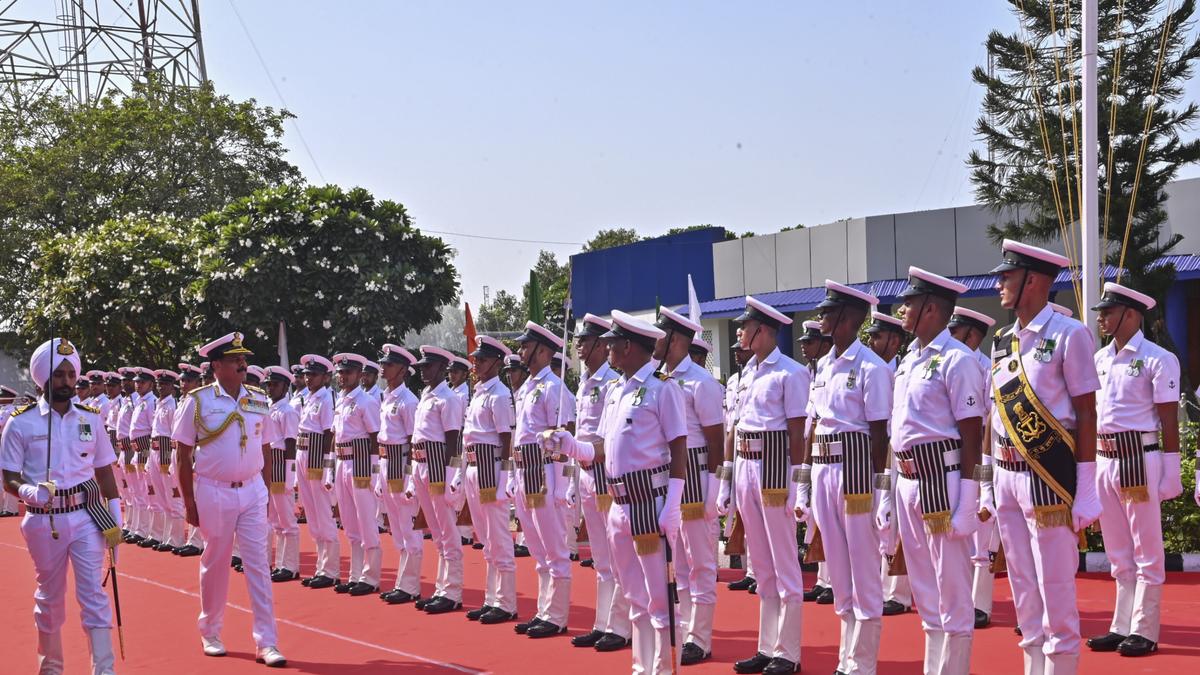
- 15 Sep 2025
In News:
The Indian Navy has recently commissioned INS Aravali, its latest naval base, at Gurugram, Haryana. Named after the ancient Aravali mountain range, the establishment is envisaged as a nerve centre for command, control, and Maritime Domain Awareness (MDA) operations, marking a significant stride in India’s maritime security architecture.
Strategic Importance
INS Aravali is designed to enhance the Navy’s information and communication infrastructure, which is central to modern maritime operations. Located in Gurugram—close to the national capital—it will support real-time decision-making, inter-agency coordination, and domain awareness across the vast Indian Ocean Region (IOR). This reflects India’s aspiration to position itself as the Preferred Security Partner in the IOR amidst evolving geopolitical challenges.
Motto and Vision
Guided by the motto “Maritime Security through Collaboration”, INS Aravali embodies a cooperative approach to maritime defence. It seeks synergy between naval information centres, maritime agencies, and allied stakeholders. The base also aligns with India’s broader strategic vision of MAHASAGAR (Mutual and Holistic Advancement for Security and Growth Across Regions), which underlines collaborative security and regional growth.
Symbolism and Identity
The crest of INS Aravali carries deep symbolism:
- A central mountain signifies the resilience and enduring strength of the Aravali Range.
- A rising sun reflects eternal vigilance, renewal, and the dawn of technological advancement in naval communications.
Together, they highlight the base’s mission to combine steadfastness with innovation in safeguarding India’s maritime interests.
Role in Maritime Domain Awareness (MDA)
MDA has become indispensable in an era of increasing threats, including piracy, illegal fishing, smuggling, cyber vulnerabilities, and grey-zone conflicts. INS Aravali’s role is to integrate satellite-based monitoring, coastal radar networks, information fusion, and real-time communication to ensure seamless surveillance of India’s maritime domain. It also supports the Navy’s partnerships with regional navies, reflecting the Indo-Pacific emphasis on collaborative security.
Broader Significance
- National Security: Enhances India’s capability to respond rapidly to maritime threats and secure sea lanes of communication, vital for trade and energy security.
- Regional Diplomacy: Strengthens India’s profile as a net security provider in the Indian Ocean, reinforcing strategic trust among neighbouring littoral states.
- Technological Edge: Demonstrates the Navy’s focus on modern information infrastructure and cyber-resilient systems to address multi-dimensional security challenges.
- Civil-Military Integration: Showcases participatory security governance by working with other agencies, reflecting a whole-of-government approach.
Non-communicable Diseases
- 14 Sep 2025
In News:
Non-Communicable Diseases (NCDs) such as cardiovascular disorders, diabetes, chronic respiratory ailments, and cancers have emerged as the leading cause of premature mortality globally. A recent Lancet study tracking progress across 185 countries (2010–2019) highlighted a worrying trend for India: unlike most nations where mortality risk from NCDs declined, India witnessed an increase in NCD-related deaths, especially among women.
Key Findings from the Lancet Study
- Rising Mortality Risk: Between 2010–2019, NCD mortality in India increased by 2.1% for females and 0.1% for males, compared to a decline in the previous decade.
- Probability of Death Before 80:
- Women – rose from 46.6% (2010) to 48.7% (2019).
- Men – remained high at 57.9% (2019), up from 57.8% (2010).
- Major Drivers: Ischaemic heart disease and diabetes (including kidney disease due to diabetes) contributed most to the rising risk, especially in women over 40 and men over 55.
- Improvements: Declines in deaths from liver cirrhosis, stroke, COPD, and stomach cancer were recorded, largely due to better blood pressure awareness and management.
Causes of the NCD Burden in India
- Lifestyle Factors
- Rapidly rising obesity, driven by unhealthy diets and sedentary lifestyles.
- Increased consumption of processed foods, sugary beverages, and trans fats.
- Tobacco and alcohol use.
- Environmental & Social Factors
- Urbanization, pollution (ambient and indoor), and chronic stress.
- Ageing population and poverty-driven dietary imbalances.
- Health System Gaps
- Limited access to quality primary care and preventive services.
- Low penetration of screening and early detection programmes in rural areas.
Expert Insights
- Diabetes–Obesity–Heart Disease Spiral: Experts warn that India’s growing obesity rates are fuelling diabetes, which in turn increases risks of cardiovascular complications.
- Policy Solutions Suggested:
- Aggressive taxation (up to 40%) on sugary drinks and ultra-processed foods.
- Subsidies for vegetables, fruits, and nutrient-rich foods.
- Urban planning reforms to create walking spaces and encourage physical activity.
- Public campaigns against tobacco, alcohol, excess salt, and stress.
- Tackling pollution as a compounding risk factor.
National Initiatives to Combat NCDs
- National Programme for Prevention and Control of NCDs (NP-NCD): Launched in 2010, expanded in 2023, focuses on early detection, management, and referral.
- 75/25 Initiative (2023): Targets 75 million people with hypertension and diabetes by 2025 through standardized care.
- Ayushman Bharat–PMJAY: Provides financial protection for tertiary NCD treatment and upgrades PHCs into Ayushman Arogya Mandirs.
- Eat Right India Movement (FSSAI): Promotes healthier diets and reduction of trans fats.
- Fit India Movement: Encourages regular physical activity and fitness to reduce lifestyle-related risks.
Way Forward
India’s NCD challenge demands a multi-pronged strategy:
- Strengthening primary healthcare for screening and early detection.
- Fiscal measures (taxes and subsidies) to influence dietary choices.
- Health education campaigns to promote lifestyle modifications.
- Integration of NCD management into universal health coverage.
- Climate and pollution control measures, given their direct links to respiratory and cardiac illnesses.
Five Years of Blue Revolution 2.0
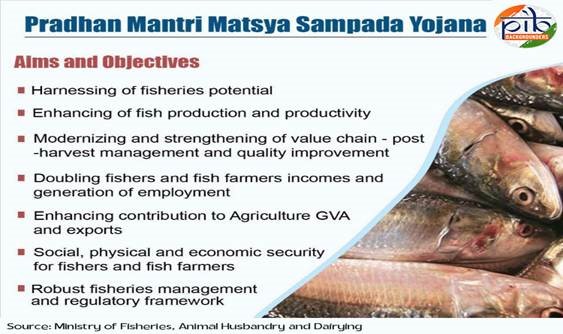
- 14 Sep 2025
In News:
India’s fisheries sector has been a key driver of food security, livelihoods, and exports. The Blue Revolution (2015) enhanced fish production and modernized infrastructure but left gaps in post-harvest management, market access, fisher welfare, and sustainability.
To bridge these, the government launched the Pradhan Mantri MatsyaSampada Yojana (PMMSY) in September 2020, with an investment of ?20,050 crore. It sought to make the sector ecologically sustainable, economically viable, and socially inclusive. The scheme has now been extended up to 2025–26.
Objectives
PMMSY aims to:
- Harness fisheries potential in a sustainable, equitable, and responsible manner.
- Enhance fish production, diversification, and efficient use of land and water.
- Strengthen value chains through modernized post-harvest infrastructure and quality improvements.
- Double incomes of fishers and generate large-scale employment.
- Enhance contribution to Agriculture GVA and exports.
- Provide social, physical, and economic security for fishers.
- Establish a robust fisheries management and regulatory framework.
The scheme functions through two components:
- Central Sector Scheme (CS): Fully funded by the Centre.
- Centrally Sponsored Scheme (CSS): Cost-sharing with states, further divided into beneficiary and non-beneficiary oriented activities.
Milestones and Achievements
In its first five years, PMMSY has significantly reshaped India’s fisheries sector:
- Production: Fish output rose from 141.64 lakh tonnes (2019–20) to a record 195 lakh tonnes in 2024–25, making India the second-largest fish producer globally (8% of world production).
- Exports: Grew from ?46,662 crore (2019–20) to ?60,524 crore (2023–24), strengthening India’s global seafood footprint.
- Livelihoods: Created nearly 58 lakh jobs and supported 99,018 women beneficiaries, with up to 60% subsidy support for women entrepreneurs.
- Technology adoption: Supported 52,058 reservoir cages, 22,057 RAS &Biofloc units, 1,525 sea cages, and raceways, making aquaculture more productive and climate-resilient.
- Post-harvest infrastructure: Approved projects worth over ?3,281 crore for 58 fishing harbours, 734 cold storages, 21 wholesale fish markets, 192 retail markets, 6,410 kiosks, and digital fish trade platforms.
- Community resilience: Declared 100 Climate Resilient Coastal Fishermen Villages and promoted sustainable technologies like Biofloc, which reduces water use and boosts productivity.
Supplementary Initiatives
- Pradhan Mantri MatsyaKisanSamridhiSah Yojana (PM-MKSSY): Launched in 2024 as a central sub-scheme with an outlay of ?6,000 crore (2023–27). Focuses on formalisation, aquaculture insurance, value chain efficiency, and quality assurance.
- National Fisheries Digital Platform (NFDP): Introduced in 2024 to digitise the sector, provide work-based digital identities, enhance credit access, ensure traceability, and integrate cooperatives. By September 2025, it had 2.7 million registrations.
Challenges
- Climate stress: Rising sea temperatures and extreme weather threaten coastal ecosystems.
- Infrastructure gaps: Cold storage and transport remain inadequate in remote areas.
- Overfishing: Risks depletion of marine resources.
- Limited reach: Many small-scale fishers lack awareness and access to formal schemes.
Scarborough Shoal Dispute
- 14 Sep 2025
In News:
The Scarborough Shoal, a triangular atoll in the South China Sea, has once again become a flashpoint after China announced the establishment of a 3,524-hectare nature reserve in the disputed waters. The move has drawn strong protests from the Philippines, which claims sovereignty over the feature and views China’s step as an assertion of jurisdiction under the guise of ecological protection.
Geographical and Strategic Significance
- The shoal is located about 220 km west of the Philippines’ Luzon Island and falls well within Manila’s 200-nautical mile Exclusive Economic Zone (EEZ) under the 1982 UN Convention on the Law of the Sea (UNCLOS).
- Claimed by both China (which calls it Huangyan Island) and the Philippines (locally known as Panatag Shoal or Bajo de Masinloc), sovereignty over the shoal remains unsettled.
- Its location near major global shipping lanes that carry over $3 trillion worth of trade annually enhances its geostrategic value.
- The lagoon and surrounding waters are rich in fish stocks, shellfish, and sea cucumbers, making it a vital fishing ground for regional communities.
Historical and Legal Context
- China’s claim: Traced back to maps from the Yuan Dynasty (1200s), Beijing argues historical sovereignty.
- Philippines’ claim: Based on proximity, falling within its EEZ, and backed by the 2016 Permanent Court of Arbitration (PCA) ruling under UNCLOS, which invalidated China’s “nine-dash line” claim. The ruling, however, did not adjudicate on sovereignty but recognized the shoal as a traditional fishing ground for multiple nations.
- Control: China seized effective control of the shoal in 2012 after a naval standoff and has since maintained coast guard and fishing militia presence, often intercepting Filipino vessels.
China’s Nature Reserve Plan
- China has approved a marine protected area to conserve the coral reef ecosystem of the shoal.
- Chinese officials argue it reflects improved “jurisdiction and governance” and claim Filipino fishermen are responsible for overfishing and pollution.
- Critics, however, view the reserve as a political instrument to strengthen Chinese control and potentially restrict access to Filipino fishermen under the pretext of conservation.
- The Philippines has accused China of coral destruction and giant clam harvesting, raising the possibility of fresh international arbitration on environmental grounds.
Regional and Global Reactions
- Philippines: Strongly protested the move, viewing it as a violation of its sovereign rights. President Ferdinand Marcos Jr. has leveraged the issue domestically while deepening ties with the United States.
- United States: Condemned the reserve plan as “destabilising and coercive.” Under the 1951 Mutual Defence Treaty, Washington has pledged to defend the Philippines against armed attacks, including those occurring “anywhere in the South China Sea.”
- Risk of escalation: Recent incidents—such as the use of water cannons, ramming of boats, and close aerial encounters—underline the danger of miscalculation, though both sides avoid direct combat to prevent escalation.
- Expert views: Chinese analysts frame the reserve as ecological protection, while Philippine experts argue it is a strategic tool to consolidate Beijing’s de facto control and marginalize other claimants.
Implications
- For the Philippines:
- Raises questions about maritime security and economic livelihood of fishermen.
- Strengthens its reliance on the U.S. alliance for deterrence.
- For China:
- Enhances its long-term maritime footprint and jurisdictional claims.
- Risks further international pushback, reinforcing perceptions of coercion.
- For International Order:
- Challenges the enforcement of UNCLOS and undermines multilateral dispute settlement mechanisms.
- Escalates tensions in one of the world’s busiest waterways with direct implications for global trade.
AdFalciVax
- 14 Sep 2025
In News:
- The Indian Council of Medical Research (ICMR) has recently licensed its indigenous multi-stage malaria vaccine, AdFalciVax, to five Indian pharmaceutical companies — Indian Immunologicals Limited, Techinvention Lifecare Private Limited, Panacea Biotec Limited, Biological E Limited, and Zydus Lifesciences.
- The technology transfer follows an Expression of Interest (EoI) process launched in July 2025, inviting eligible organisations to commercialise the vaccine.
About AdFalciVax
AdFalciVax is India’s first recombinant multi-stage malaria vaccine, developed by the Regional Medical Research Centre (RMRC), Bhubaneswar, under ICMR. It is specifically designed to tackle Plasmodium falciparum, the most lethal malaria parasite responsible for high morbidity and mortality across tropical regions.
Key Features
- Dual-purpose protection: Prevents Plasmodium falciparum infection in individuals and reduces community-level transmission.
- Pre-bloodstream targeting: Stops the parasite before it reaches the bloodstream, breaking the infection cycle.
- Novel technology: Uses Lactococcus lactis, a genetically engineered food-grade bacterial host, as its delivery system.
- Dual-antigen approach:
- PfCSP (Plasmodium falciparum circumsporozoite protein) – prevents initial infection.
- Pfs230 and Pfs48/45 fusion proteins – block parasite transmission from humans to mosquitoes.
- Validated research: Pre-clinical trials conducted in collaboration with ICMR–National Institute of Malaria Research (NIMR) and the National Institute of Immunology (NII), New Delhi, supported by the Department of Biotechnology.
Licensing and Technology Transfer
The licences are granted on a non-exclusive basis, enabling multiple companies to develop, manufacture, and commercialise the vaccine simultaneously. This model is expected to:
- Accelerate vaccine production and reduce costs.
- Ensure wide accessibility within India and potentially in malaria-endemic regions abroad.
- Strengthen India’s position in vaccine innovation and biotechnology.
Significance
- Public health impact: With malaria still a major global health challenge, AdFalciVax offers a potential breakthrough in reducing disease burden.
- Strategic milestone: Marks India’s entry into the development of advanced recombinant vaccines targeting multi-stage pathogens.
- Global relevance: Supports the World Health Organization’s (WHO) goal of reducing malaria cases and deaths by at least 90% by 2030 under the Global Technical Strategy for Malaria.
Biodiversity Heritage Site
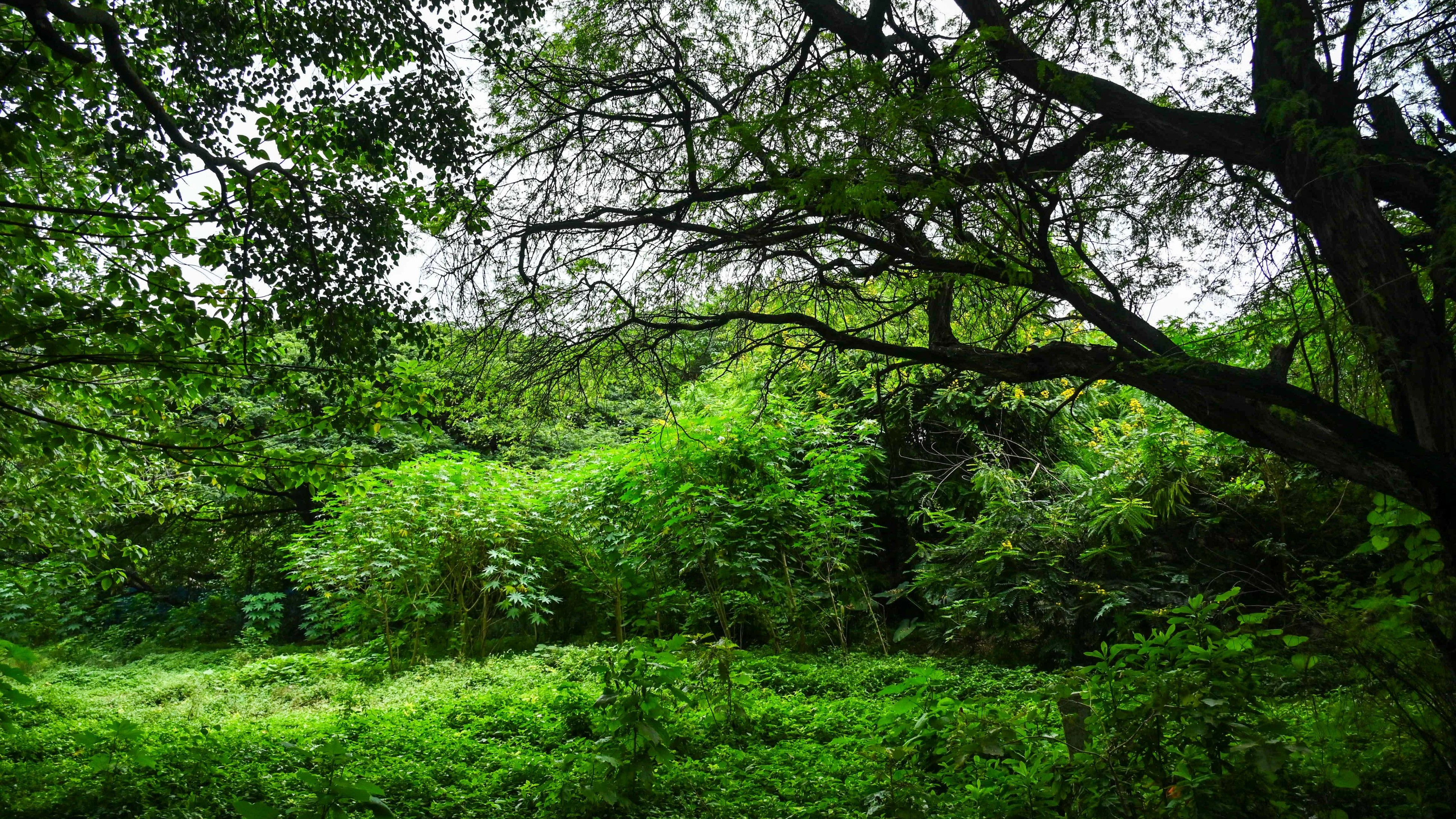
- 14 Sep 2025
In News:
Bengaluru has recently witnessed the declaration of 8.6 acres of green cover at Cantonment Railway Colony as a Biodiversity Heritage Site (BHS)—the second in the city after the Gandhi Krishi Vigyan Kendra (GKVK). This decision marks a crucial step in safeguarding urban green spaces under increasing developmental pressures.
Citizen-led Conservation Movement
- The site was earlier earmarked for commercial development by the Rail Land Development Authority in collaboration with private real estate players. However, strong resistance emerged from citizens and environmental groups, particularly the ParisarakkagiNaavu organization. A large-scale campaign saw the participation of over 15,000 residents, of whom only two opposed the proposal, reflecting strong public consensus in favor of conservation.
- This site houses 371 trees across nearly 50 species, highlighting its ecological diversity. The move demonstrates how community activism and participatory governance can effectively influence environmental decision-making.
About Biodiversity Heritage Sites
Biodiversity Heritage Sites are unique ecosystems identified for their ecological, cultural, and evolutionary significance. They may encompass terrestrial, aquatic, coastal, or marine ecosystems. Key features include:
- High species richness (wild and domesticated), including endemic and threatened species.
- Presence of keystone species, wild ancestors of cultivated plants, or species of evolutionary importance.
- Historical or cultural relevance, such as fossil beds or sites linked with traditional practices.
The first BHS in India was the Nallur Tamarind Grove (2007, Karnataka), and since then, several others have been declared across states.
Legal Framework
The Biological Diversity Act, 2002 (Section 37) empowers state governments to notify areas of biodiversity importance as BHS, in consultation with local bodies. Key provisions include:
- State autonomy in management, conservation, and framing rehabilitation schemes for affected communities.
- Community participation, with no restrictions on prevailing traditional practices unless voluntarily adopted.
- Purpose: Enhancing quality of life and ensuring sustainable use of biodiversity resources.
Thus, the Cantonment Colony green cover’s recognition aligns with both ecological imperatives and community welfare.
Significance for Bengaluru and Urban India
- Urban ecological security: Protecting 8.6 acres of dense green cover helps counteract urban heat islands, air pollution, and biodiversity loss in one of India’s most rapidly expanding cities.
- Community stewardship: The initiative illustrates how local involvement strengthens environmental governance.
- Policy relevance: The case highlights the role of public consultation in environmental decision-making, setting a precedent for other urban centers facing similar challenges.
Perpetual Bonds
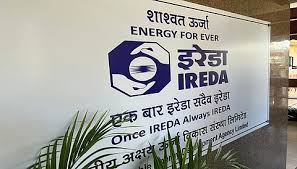
- 13 Sep 2025
In News:
- The Indian Renewable Energy Development Agency Ltd (IREDA) has successfully raised ?453 crore through its second issue of Perpetual Bonds at an annual coupon of 7.70%.
- The issue received bids worth ?1,343 crore against the base size of ?100 crore and a Green Shoe option of ?400 crore, resulting in an oversubscription of 2.69 times.
- This fund infusion will help IREDA strengthen its capital base and enhance its ability to finance green and renewable energy projects, in line with India’s clean energy transition goals.
What are Perpetual Bonds?
- Definition: A type of fixed-income security with no maturity date, paying interest indefinitely. They are also called “perps” or “consol bonds.”
- Redemption: Issuers are not obligated to repay the principal, though most bonds have a call option after 5–10 years, allowing issuers to redeem them if market conditions are favorable.
- Returns & Risk:
- Offer higher interest rates to compensate for indefinite tenure.
- Highly sensitive to interest rate fluctuations.
- In case of bankruptcy, bondholders are paid after secured creditors but before shareholders.
- Accounting Perspective: Often treated as equity-like instruments on balance sheets, making them attractive for strengthening capital structure without diluting ownership.
- Usage in India: Commonly issued by banks and financial institutions to meet capital requirements.
Significance of IREDA’s Move
- Capital Strengthening: Provides a stable, long-term source of funds without creating repayment obligations.
- Boost to Renewable Energy: Ensures greater financing availability for solar, wind, bioenergy, and emerging green technologies.
- Market Confidence: Oversubscription reflects investor trust in India’s renewable energy sector and in IREDA’s financial stability.
- Policy Alignment: Supports India’s commitment to achieve 500 GW of renewable capacity by 2030 and transition towards net-zero by 2070.
Isobutanol
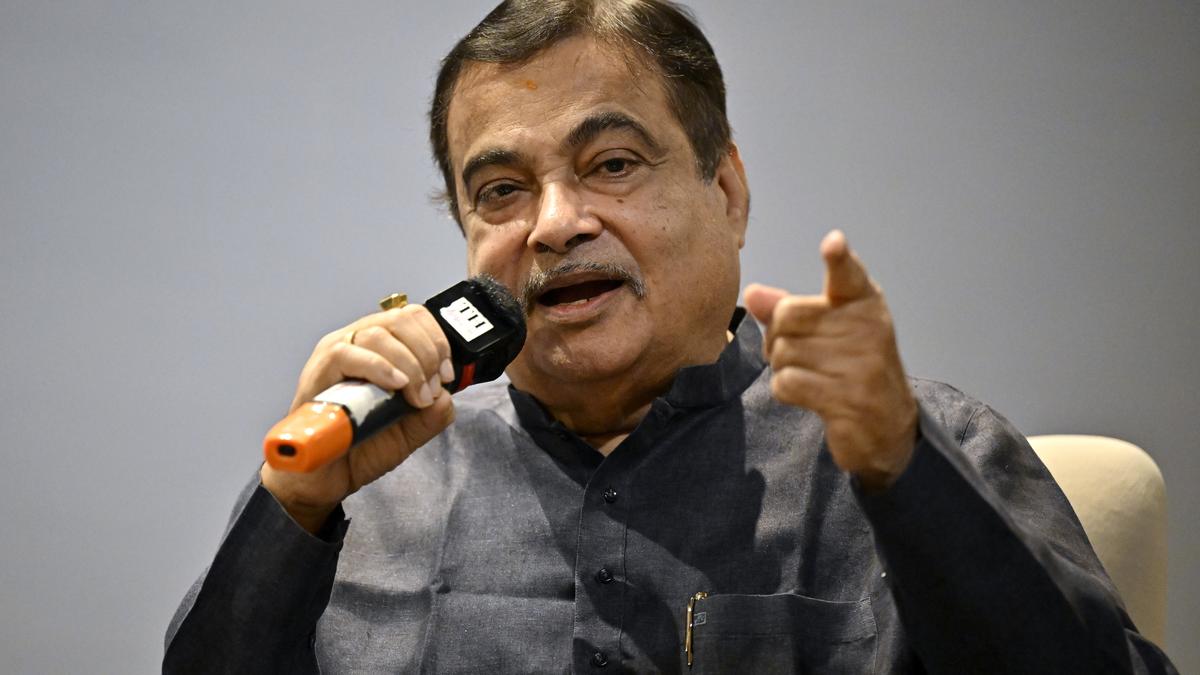
- 13 Sep 2025
In News:
- The Government of India is exploring the possibility of blending isobutanol with diesel, following the limited success of earlier attempts at blending ethanol with diesel.
- At the annual conclave of the India Sugar and Bio-Energy Manufacturers Association (ISMA), Union Minister for Road Transport and Highways, Nitin Gadkari, announced that the Automotive Research Association of India (ARAI) is conducting trials to test the feasibility of 10% isobutanol–diesel blends. Alongside blending, isobutanol is also being considered for standalone fuel applications.
- This development comes at a time when India has been pushing for higher ethanol blending with petrol (20%), but challenges remain in extending the same success to diesel, which accounts for the bulk of transport fuel consumption.
About Isobutanol
- Chemical Nature: An alcohol with the chemical formula C?H??O and one of the four isomers of butanol.
- Physical Properties:
- Clear, colorless liquid with a distinct odor.
- Moderately soluble in water.
- Highly flammable with a flash point just above room temperature.
- Vapors are heavier than air, making handling risky.
- Health Hazards: Prolonged exposure can cause skin irritation, eye damage (including vision loss), and respiratory issues.
Applications of Isobutanol
- Industrial Uses: Widely used as a solvent in paints, coatings, lacquers, flavor and fragrance industries, pharmaceuticals, and pesticides.
- Food Additive: Approved for limited use; also found naturally in some foods and alcoholic beverages.
- Biofuel Potential:
- Can be manufactured from plant-based sources using fermentation, often derived from ethanol.
- Higher energy density (heating value) compared to ethanol.
- Less corrosive and less hygroscopic than ethanol, enabling easier storage and transport in existing infrastructure.
- High octane rating, making it suitable for internal combustion engines.
- Unlike ethanol, it does not significantly distort vapor pressure when blended with gasoline.
Significance for India
- Energy Security: Diversifying biofuel options can reduce reliance on crude oil imports.
- Environmental Benefits: Biofuel adoption helps lower greenhouse gas emissions.
- Industrial Opportunities: Opens new avenues for sugar and bio-energy industries, which are central to India’s ethanol economy.
- Policy Alignment: Supports the government’s push towards alternative fuels and cleaner mobility under initiatives like the National Bio-Energy Mission.
Fast Track Immigration-Trusted TravellerProgramme
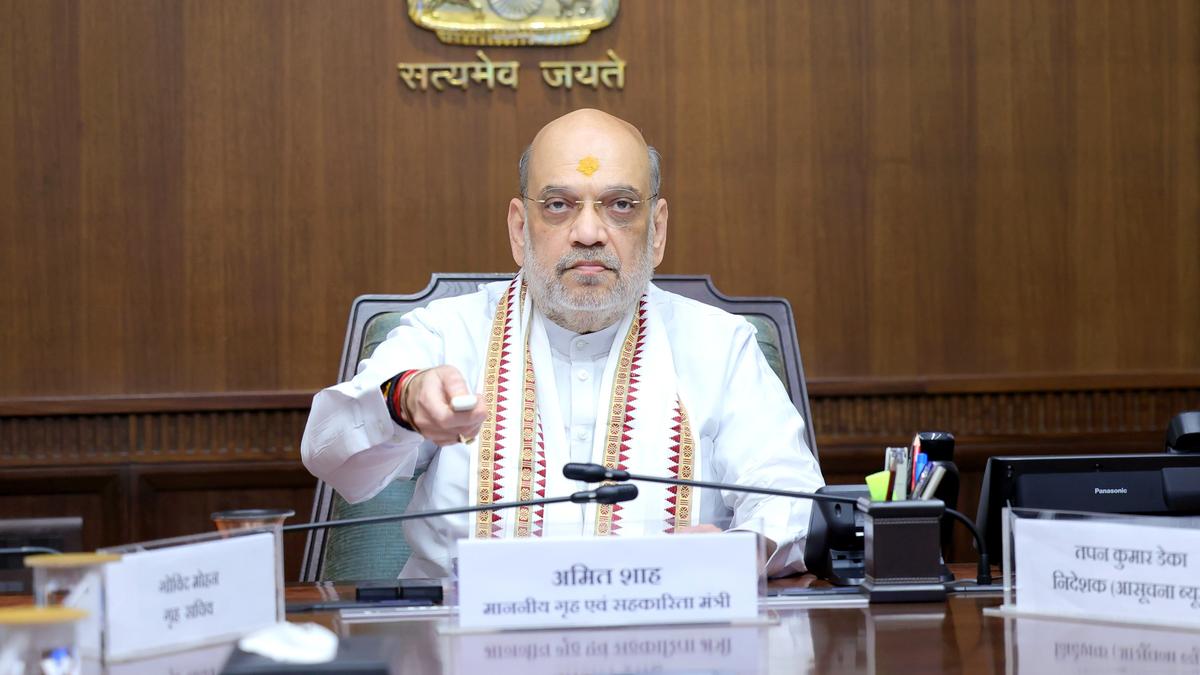
- 13 Sep 2025
In News:
- The Union Home Minister recently launched the Fast Track Immigration – Trusted TravellerProgramme (FTI-TTP) at five additional airports — Lucknow, Thiruvananthapuram, Tiruchirappalli, Kozhikode, and Amritsar — further expanding its coverage across the country.
- The initiative aims to provide seamless, secure, and faster immigration clearance for Indian citizens and Overseas Citizen of India (OCI) cardholders.
Background and Coverage
- Launch: First introduced at Delhi’s Indira Gandhi International (IGI) Airport in 2024.
- Latest Expansion: Now operational at 13 airports nationwide.
- Nodal Agency: Implemented by the Bureau of Immigration (BoI) under the Ministry of Home Affairs (MHA).
Objectives
- To reduce waiting time at immigration counters.
- To enhance international mobility of Indian citizens and OCI cardholders.
- To ensure convenient yet secure border management using digital technology.
Enrollment and Process
- Online Registration: Applicants must apply via the official portal https://ftittp.mha.gov.in, providing personal details and uploading documents.
- Biometric Capture: Collected either at Foreigners Regional Registration Offices (FRROs) or at the airport.
- Immigration Process at e-Gates:
- Boarding pass scan to fetch flight details.
- Passport scan for identity verification.
- Biometric authentication (fingerprint/face scan).
- Automated clearance — the e-gate opens within 30 seconds, eliminating the need for manual checks.
- Validity: Enrollment remains valid until the passport expires or for five years, whichever is earlier, with provision for renewal.
Significance
- Cuts down long queues at airports, reducing clearance time to under 30 seconds.
- Aligns with India’s vision of Digital Governance and Smart Borders.
- Enhances traveller experience, particularly for frequent international flyers.
- Strengthens security protocols through biometric and digital verification.
National Forest Martyrs Day 2025
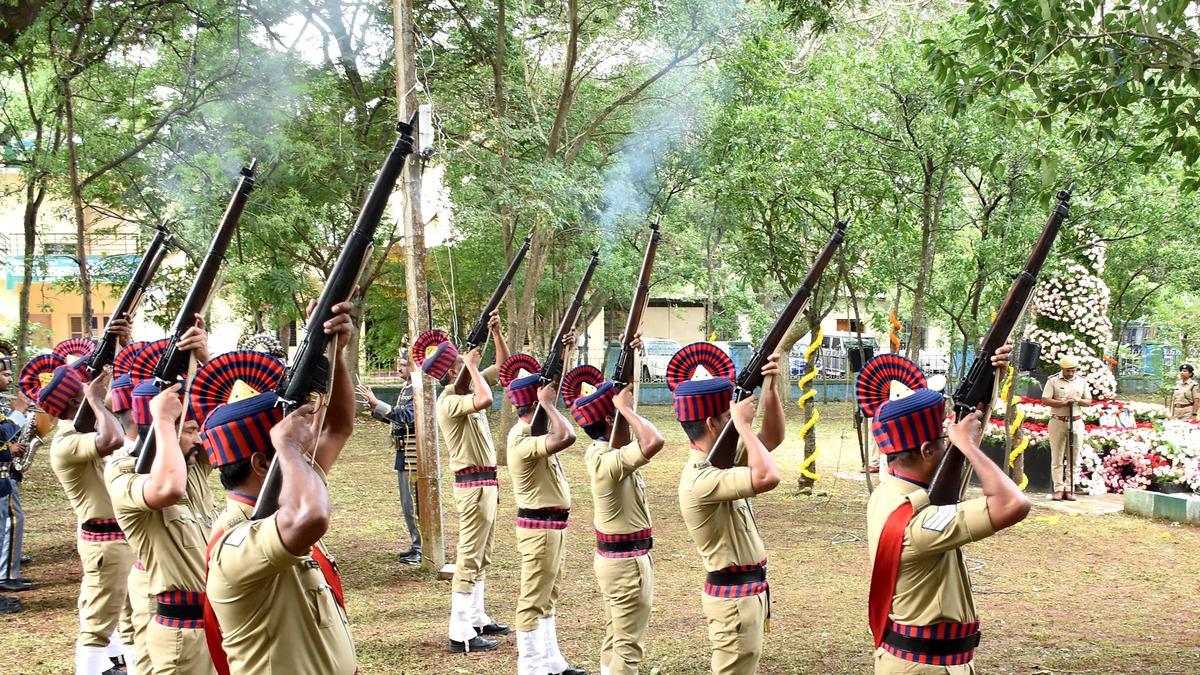
- 13 Sep 2025
In News:
- National Forest Martyrs Day is observed annually on September 11 to pay tribute to forest officials, personnel, and community members who have sacrificed their lives while protecting India’s forests and wildlife.
- The day recognizes the risks undertaken in the line of duty against threats like illegal logging, poaching, encroachment, and forest fires.
Historical Background
- The observance is rooted in the Khejarli Massacre of 1730 in present-day Rajasthan. When Maharaja Abhai Singh of Marwar ordered the felling of Khejri trees for palace construction, the Bishnoi community, led by Amrita Devi Bishnoi, resisted by embracing the trees. In the brutal crackdown, 363 villagers lost their lives to protect their sacred groves.
- This legacy later inspired environmental movements such as the Chipko Movement (1970s), reinforcing India’s tradition of community-led conservation. Recognizing this historic sacrifice, the Ministry of Environment, Forest and Climate Change (MoEFCC) officially declared September 11 as National Forest Martyrs Day in 2013.
Significance
- Commemoration of Sacrifice: The day honours not only the Bishnoi martyrs but also countless forest personnel who have died in the line of duty.
- Environmental Awareness: Highlights the critical role of forests in climate regulation, biodiversity conservation, and ecosystem services like air and water purification.
- Community Involvement: Encourages local communities to uphold traditions of eco-conscious living.
- Policy Emphasis: Reinforces the need for stronger laws and protection mechanisms for natural resources and frontline forest staff.
Observance
The day is marked through:
- Memorial ceremonies in forest departments.
- Tree plantation drives to promote ecological restoration.
- Awareness campaigns and educational programmes in schools and communities.
- Community participation to spread the message of sustainable living and conservation.
All India Debt and Investment Survey (AIDIS) and Situation Assessment Survey (SAS) of Agricultural Households (2026–27)
- 13 Sep 2025
In News:
- The National Statistics Office (NSO), under the Ministry of Statistics and Programme Implementation (MoSPI), is set to conduct two of its flagship household surveys — the All India Debt and Investment Survey (AIDIS) and the Situation Assessment Survey (SAS) of Agricultural Households — during July 2026 to June 2027.
- These surveys are part of the broader framework of the National Sample Survey (NSS), initiated in 1950, which provides critical data on consumption, employment, health, indebtedness, and welfare, forming the backbone of evidence-based policymaking in India.
All India Debt and Investment Survey (AIDIS)
- Origin and Evolution: Traces its roots to the All India Rural Credit Survey (1951-52), later expanded in 1961-62 to cover debt and investment. Since then, AIDIS has been conducted roughly once every decade, with the latest in the 77th Round (2019), at the request of the Reserve Bank of India (RBI).
- Coverage: Captures data on household indebtedness, savings, and asset ownership across rural and urban households.
- Significance:
- Inputs for national accounts and measurement of wealth distribution.
- Helps assess inequality in asset ownership and functioning of credit markets.
- Provides a crucial evidence base for the RBI, MoSPI, and financial policymakers.
Situation Assessment Survey (SAS) of Agricultural Households
- Launch and Expansion: Initiated in 2003 to examine the economic conditions of farmers, expanded in 2013 to cover all agricultural households, and further refined in the 2019 round.
- Scope of Coverage:
- Income and expenditure patterns of agricultural households.
- Indebtedness and credit access.
- Ownership of land and livestock.
- Crop and livestock production, farming practices, and adoption of technology.
- Access to government schemes, including crop insurance.
- Policy Relevance: Used extensively by the Ministry of Agriculture and Farmers Welfare, NITI Aayog, researchers, and financial institutions to frame policies for agriculture and rural development.
Technology Perspective and Capability Roadmap (TPCR) 2025
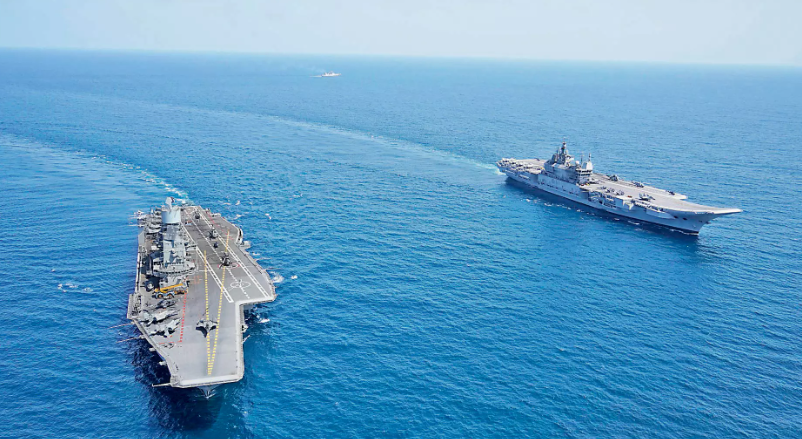
- 12 Sep 2025
In News:
- The Ministry of Defence (MoD) recently released the Technology Perspective and Capability Roadmap (TPCR) 2025, a strategic blueprint outlining India’s defence technology and capability requirements over the next 15 years.
- The roadmap aims to guide the Indian Army, Navy, and Air Force in modernisation while providing domestic industry, academia, and research institutions early visibility to align R&D and production with future procurement needs. Indigenisation and self-reliance form the core of TPCR 2025.
Objectives of TPCR 2025
- Early Visibility for Industry: Help domestic manufacturers and research organisations plan development and production of advanced defence systems.
- Indigenisation: Reduce dependence on imports and promote domestic defence manufacturing.
- Future-Ready Armed Forces: Equip the military to face multi-domain warfare challenges, including cyber, space, AI-enabled, and hybrid conflicts.
- Sustainability: Integration of green logistics and energy-efficient systems in defence operations.
Key Features by Service
Navy:
- Nuclear Propulsion: Plans to induct 10 nuclear propulsion systems for aircraft carriers and large surface combatants, providing virtually unlimited endurance at sea.
- Next-Generation Aircraft Carrier: Equipped with Electromagnetic Aircraft Launch System (EMALS) to launch heavy fighters, airborne early warning aircraft, and UAVs in all sea states. Digital twin simulations to enable predictive maintenance.
- Surface Combatants: Induction of 5–10 destroyers, 7 corvettes, 4 Landing Platform Docks (LPDs) (~29,000 tonnes each), and 100 Next Generation Fast Interceptor Craft for coastal security.
- Underwater Warfare: 20 high-endurance Autonomous Underwater Vehicles (AUVs) for long-range surveillance and mine countermeasures.
- Missiles & Weapons: Over 200 surface-to-surface missiles and universal launchers for multi-platform deployment.
Army:
- ArmouredModernisation: Replacement of ageing T-72 fleet with 1,800 Future Ready Combat Vehicles (FRCVs); 300–400 light tanks for high-altitude sectors.
- Anti-Tank and Precision Weapons: Procurement of 50,000 ATGMs with tandem HEAT warheads, along with 600,000 artillery rounds, emphasising precision-guided munitions.
- UAV & Robotic Systems: Deployment of 70 MALE/HALE UAVs, 800 integrated drone-loitering munitions systems, and 400 ultra-light missiles for UAVs; over 700 robotic counter-IED systems.
- Cyber & AI Warfare: AI-enabled detection, classification, and adaptive jammers creating 15 km electronic denial zones; deepfake detection tools for operational security.
Air Force:
- Directed-Energy Weapons: 10–15 Tactical High-Energy Laser (THEL) systems with ranges of 6–15 km; high-power microwave systems to neutralise incoming threats.
- Stealth and UAVs: 150 stealth bomber drones for deep-strike missions; 100+ remotely piloted aircraft for ISR and strike roles.
- Persistent Surveillance: 75 High-Altitude Pseudo-Satellites (HAPS) and 20 stratospheric airships for continuous ISR and communications over extended periods.
Tri-Services (Joint):
- Hypersonic Missiles: Induction of 500+ scramjet-propelled hypersonic missiles capable of Mach 5+ speeds for rapid strike across land, sea, and air.
- Universal Missile Launchers: Platforms for multiple missile types to ensure interoperability.
- Cyber-Space Preparedness: AI-as-a-service platforms for 4,000 users, quantum key distribution networks, satellite hardening, and post-quantum secure communications.
Cross-Cutting Technologies
- AI & ML: Smart, predictive warfare through digital twin simulations and autonomous systems.
- Hybrid Warfare Capability: Integration of unmanned systems, robotic tools, and precision-guided munitions.
- Green & Sustainable Defence: Energy-efficient platforms and logistics aligned with national sustainability goals.
Strategic Significance
TPCR 2025 positions India to:
- Achieve self-reliance in defence technologies.
- Maintain credible deterrence and modernisation across all domains.
- Address emerging threats in cyber, space, and multi-domain warfare environments.
- Strengthen domestic defence industrial base through early technology visibility.
India’s first port-based Green Hydrogen Pilot Project
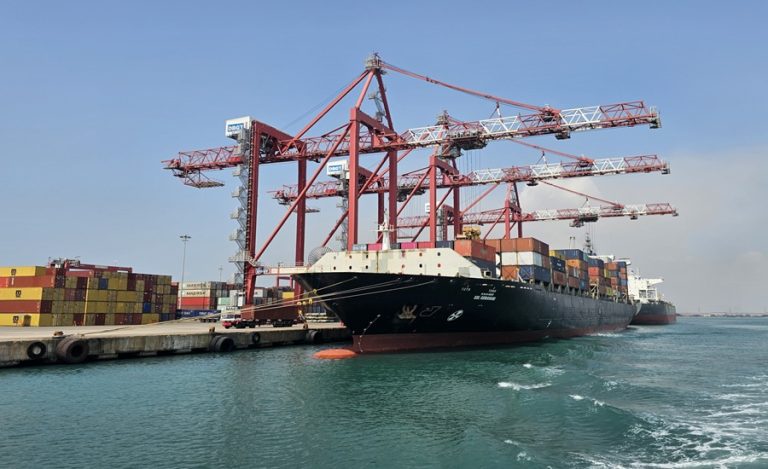
- 12 Sep 2025
In News:
Union Minister for Ports, Shipping and Waterways, SarbanandaSonowal, inaugurated India’s first port-based Green Hydrogen Pilot Project at V.O. Chidambaranar (VOC) Port, Tuticorin, Tamil Nadu, marking a significant step in India’s clean energy transition and green shipping ambitions.
Key Features of the Project
- Capacity: 10 Nm³ per hour.
- Cost: ?3.87 crore.
- Uses: The green hydrogen produced will power streetlights and an EV charging station in the port colony.
- Significance: VOC Port becomes the first Indian port to generate green hydrogen, aligning with India’s vision of Viksit Bharat 2047 and clean energy leadership.
Associated Green Initiatives at VOC Port
- Green Methanol Bunkering and Refuelling Facility
- Capacity: 750 m³, at a cost of ?35.34 crore.
- Expected to make VOC Port a green bunkering hub in South India.
- Linked to the proposed Coastal Green Shipping Corridor (Kandla–Tuticorin).
- Renewable Energy and Infrastructure Projects
- 400 KW rooftop solar plant, raising total capacity to 1.04 MW (highest among Indian ports).
- Foundation for a 6 MW wind farm.
- ?24.5 crore link conveyor to improve coal handling efficiency.
- ?90 crore multi-cargo berth and 3.37 km four-lane road for port connectivity.
- Upcoming Tamil Nadu Maritime Heritage Museum to showcase maritime history.
Strategic Importance
- Port Modernisation: Chennai, Kamarajar, and VOC ports have seen rapid expansion under the SagarmalaProgramme.
- 98 projects worth ?93,715 crore initiated in Tamil Nadu’s ports in the past 11 years.
- 50 projects completed; ?16,000 crore invested in modernisation and capacity building.
- Economic Impact:
- Expected to generate thousands of jobs.
- Attract global investments in green shipping and clean fuels.
- Strengthen India’s ambition of becoming a top 10 shipbuilding nation by 2030 and top 5 by 2047.
About V.O. Chidambaranar (VOC) Port
- Location: Tuticorin, Tamil Nadu, on the Coromandel Coast.
- Status: One of India’s 13 major ports, serving as a key maritime hub for South India.
- History: Formerly Tuticorin Port, renamed in 2011 after freedom fighter V.O. Chidambaranar (KappalottiyaTamizhan).
- Role: Major centre for coal handling, container trade, and now emerging as a green energy hub.
Angikaar 2025 Campaign
- 12 Sep 2025
In News:
The Ministry of Housing and Urban Affairs (MoHUA) has launched Angikaar 2025, a nationwide outreach campaign under the Pradhan Mantri Awas Yojana – Urban 2.0 (PMAY-U 2.0). The initiative seeks to bridge last-mile implementation gaps, accelerate housing delivery, and ensure that welfare benefits reach vulnerable urban families.
Objectives of Angikaar 2025
- Awareness Generation: Create widespread awareness of PMAY-U 2.0 across urban India.
- Housing Delivery: Fast-track verification of applications and completion of sanctioned houses.
- Beneficiary Support: Facilitate access to financial assistance, credit-linked support, and convergence with other welfare schemes.
- Inclusion: Prioritise housing needs of Special Focus Groups identified under PMAY-U 2.0.
Key Features
- Coverage: Over 5,000 Urban Local Bodies (ULBs) across India.
- Activities: Door-to-door campaigns, awareness drives, loan melas, cultural events, and anchor events under PM Awas Mela – Shehri.
- Convergence: Linkage with schemes such as the Credit Risk Guarantee Fund Trust for Low Income Housing (CRGFTLIH) and PM Surya Ghar: Muft Bijli Yojana.
PMAY-U Progress So Far
- Sanctioned Houses: 120 lakh.
- Completed & Delivered: 94.11 lakh pucca houses.
- Pending: Angikaar 2025 will focus on expediting completion of remaining sanctioned houses.
- Future Target under PMAY-U 2.0: Provide financial support (up to ?2.5 lakh per family) to an additional one crore urban families for constructing or purchasing pucca houses.
Significance
- Last-Mile Outreach: Brings government schemes closer to beneficiaries through direct engagement.
- Community Mobilisation: Promotes Jan Bhagidari (people’s participation) via awareness camps and cultural events.
- Holistic Development: Integrates housing with access to electricity, financial inclusion, and basic services.
- Housing for All: Reaffirms the government’s commitment to inclusive and sustainable urban development.
Vulture Network Portal
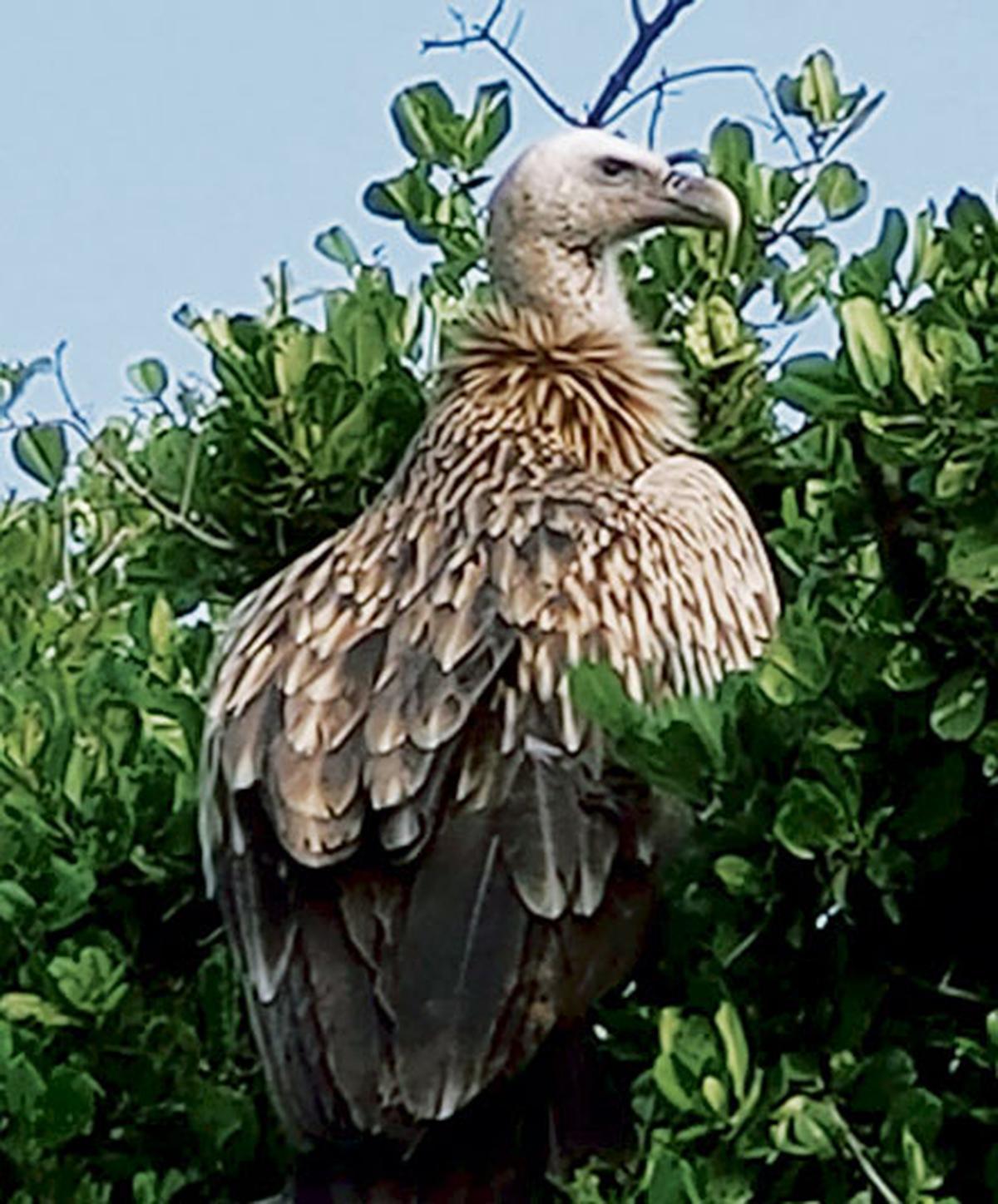
- 12 Sep 2025
In News:
- Vultures, once abundant across India, have faced catastrophic population declines over the past three decades due to carcass poisoning, harmful veterinary drugs (notably diclofenac), and negative social perceptions.
- Recognizing the urgency of conservation, an Assam-based foundation has launched India’s first dedicated vulture conservation portal to create a knowledge-sharing and awareness-driven network for their protection.
The Vulture Network Portal
- Nature: A cloud-based, first-of-its-kind portal in India dedicated to vulture conservation.
- Developer: We Foundation India, in collaboration with partners like the Assam Bird Monitoring Network and other organizations.
- Functions:
- Compiles scientific information on vultures.
- Provides freely downloadable outreach materials for awareness campaigns.
- Disseminates conservation material in local languages (beginning with Assamese) to ensure community participation.
- Focuses on addressing key threats to vultures, including:
- Carcass poisoning.
- Harmful veterinary drugs such as diclofenac.
- Myths and negative social perceptions around scavenger birds.
Significance
- Community Engagement: Builds a network of individuals and organizations working for vulture conservation.
- Policy & Awareness: Offers a centralized platform to support awareness drives, education, and grassroots campaigns.
- Localized Impact: By promoting information in regional languages, it enhances outreach among rural communities, where interaction with vultures is most direct.
Vultures of India
India hosts several species of vultures, many of which are critically endangered:
- Slender-billed vulture – ~800 mature individuals left.
- White-rumped vulture.
- Red-headed vulture.
- Himalayan griffon.
- Indian vulture.
- Cinereous vulture.
- Eurasian griffon.
- Egyptian vulture.
- Bearded vulture.
Conservation Context
- India has already banned the veterinary use of diclofenac (a major cause of vulture deaths) and promoted safer alternatives like meloxicam.
- Initiatives such as Vulture Safe Zones, breeding centres, and now this digital portal strengthen the country’s commitment to vulture conservation.
- As vultures play a critical ecological role as scavengers, their survival is linked to disease control and overall ecosystem health.
P-47 Protein
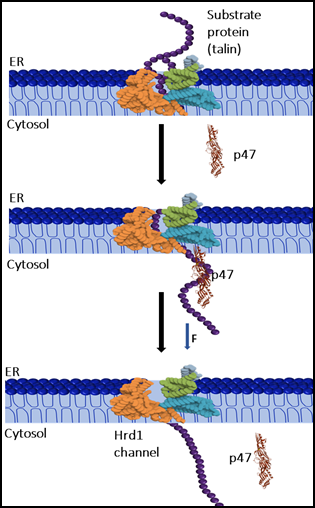
- 12 Sep 2025
In News:
Proteins within living cells constantly face mechanical stress during processes such as intracellular transport, cytoskeletal remodeling, and degradation. These stresses can compromise protein folding and stability, leading to cellular dysfunction.
Traditionally, specialized proteins called canonical chaperones were considered the primary agents guiding protein folding and stability. However, recent research has uncovered a surprising player in this landscape—p47, a cofactor protein with previously underestimated roles.
Discovery by SNBNCBS
A study conducted by the S. N. Bose National Centre for Basic Sciences (SNBNCBS), an autonomous institute under the Department of Science & Technology (DST), revealed that p47 functions as a “mechanical chaperone.” Using single-molecule magnetic tweezers, researchers applied controlled mechanical forces to mimic stresses faced by proteins inside cells.
The experiments demonstrated that:
- p47 stabilizes mechanically stretched proteins, enabling them to refold even under constant pulling forces.
- It enhances the mechanical efficiency of protein extraction from the endoplasmic reticulum (ER) lumen to the cytoplasm.
- It facilitates polypeptide translocation through narrow pores, reducing misfolding risks and improving protein quality control.
About p47 Protein
- Nature: A cofactor protein traditionally associated with the p97 complex, a major cellular machine responsible for protein trafficking, degradation, and membrane fusion.
- Revised Role: Beyond being a passive assistant, p47 exhibits autonomous, force-dependent protective activity, extending the functional repertoire of accessory proteins.
Significance of the Findings
- Scientific Breakthrough
- This is the first direct, single-molecule evidence that cofactors can act as mechanical chaperones.
- It challenges the existing view of accessory proteins as mere helpers and redefines their role in protein mechanics.
- Therapeutic Potential
- Targeting p47 or similar cofactors may provide new treatment avenues for diseases where protein stability under stress is compromised, such as:
- Cardiomyopathies (heart muscle diseases).
- Laminopathies (genetic disorders linked to nuclear protein instability).
- This could lead to precision medicine strategies focusing on mechanical resilience of proteins.
- Targeting p47 or similar cofactors may provide new treatment avenues for diseases where protein stability under stress is compromised, such as:
- Broader Implications
- Enhances understanding of cellular stress response mechanisms.
- Opens possibilities for drug development aimed at modulating protein folding under force.
- Strengthens India’s contributions to cutting-edge biophysical research with global relevance.
Health AI Global Regulatory Network (GRN)
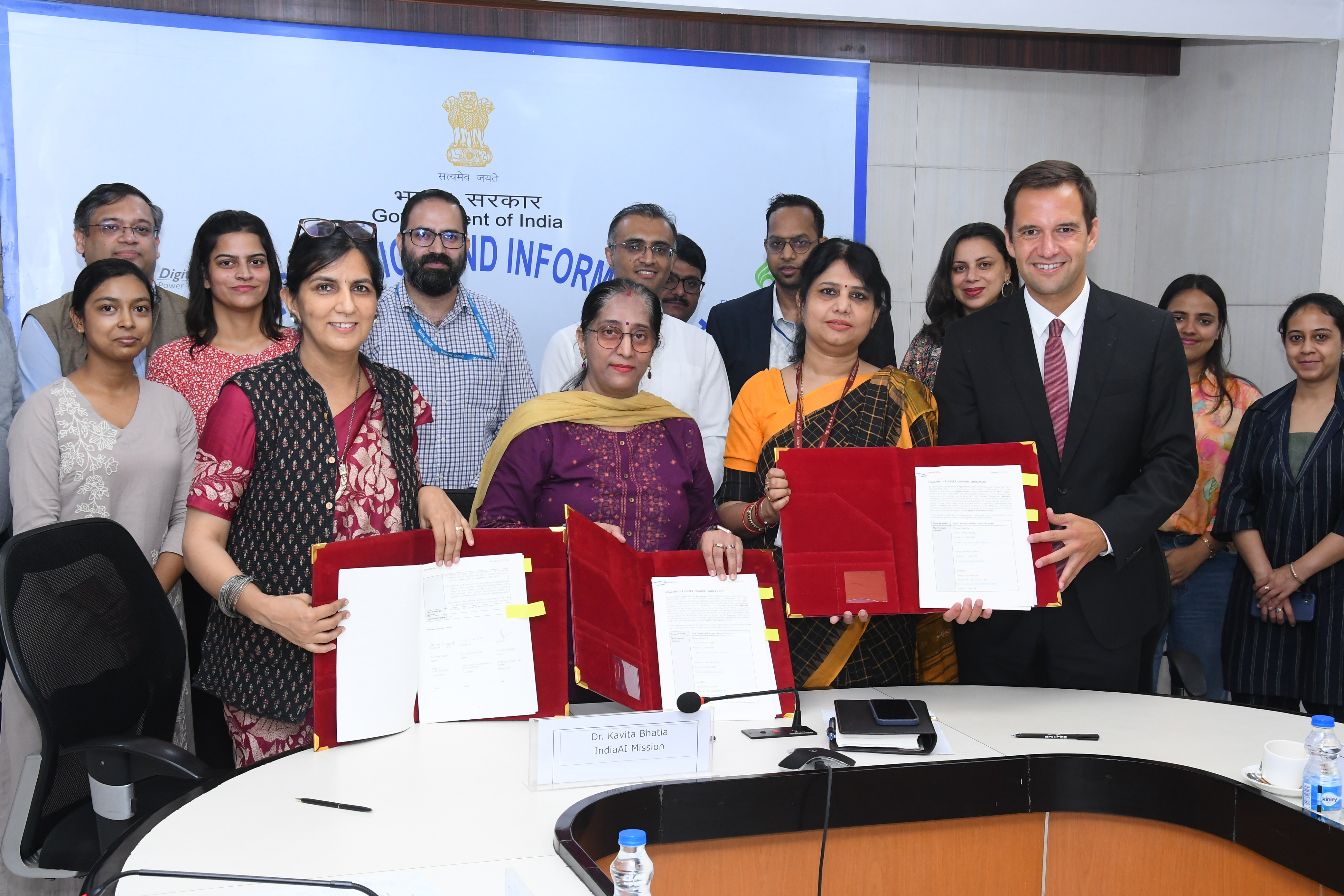
- 11 Sep 2025
In News:
India has joined the HealthAI Global Regulatory Network (GRN), becoming one of the pioneer countries shaping global norms for the responsible use of Artificial Intelligence (AI) in healthcare. This move reinforces India’s leadership in digital health innovation and aligns with its broader strategy to promote safe, equitable, and effective AI applications.
About the HealthAI Global Regulatory Network (GRN)
- Nature: An international, Geneva-based non-profit consortium of health regulators.
- Objective: To ensure fair, secure, and efficient deployment of AI in healthcare by building trust, strengthening oversight, and promoting shared learning.
- Functions:
- Develop joint safety standards and early warning systems for emerging risks.
- Facilitate cross-country collaboration and technical support.
- Maintain a global directory of registered AI health tools for transparency.
- Membership: Initial “pioneer countries” from diverse regions, including the UK, Singapore, and now India.
India’s Role in the Network
India’s participation is led by:
- Indian Council of Medical Research – National Institute for Research in Digital Health and Data Science (ICMR-NIRDHDS): A key institute driving digital health research under ICMR.
- IndiaAI: The Government of India’s central initiative under MeitY (via Digital India Corporation), aimed at building a comprehensive AI ecosystem.
Together, they will:
- Share safety protocols and best practices.
- Monitor AI performance in clinical settings.
- Contribute to shaping global frameworks for AI regulation.
Strategic Importance for India
- Global Leadership: Solidifies India’s position as a pioneer in responsible AI for health, enhancing its credibility in digital health diplomacy.
- National AI Strategy Alignment: Supports India’s vision to become a global hub for AI innovation and workforce, leveraging AI for public health, startups, and job creation.
- Strengthening Healthcare Delivery: Ensures AI-driven solutions enhance efficiency, safety, and equity in India’s diverse health ecosystem.
- Cross-Border Collaboration: Provides access to technical expertise, early warning systems, and shared regulatory tools.
Sample Registration System (SRS) Statistical Report 2023
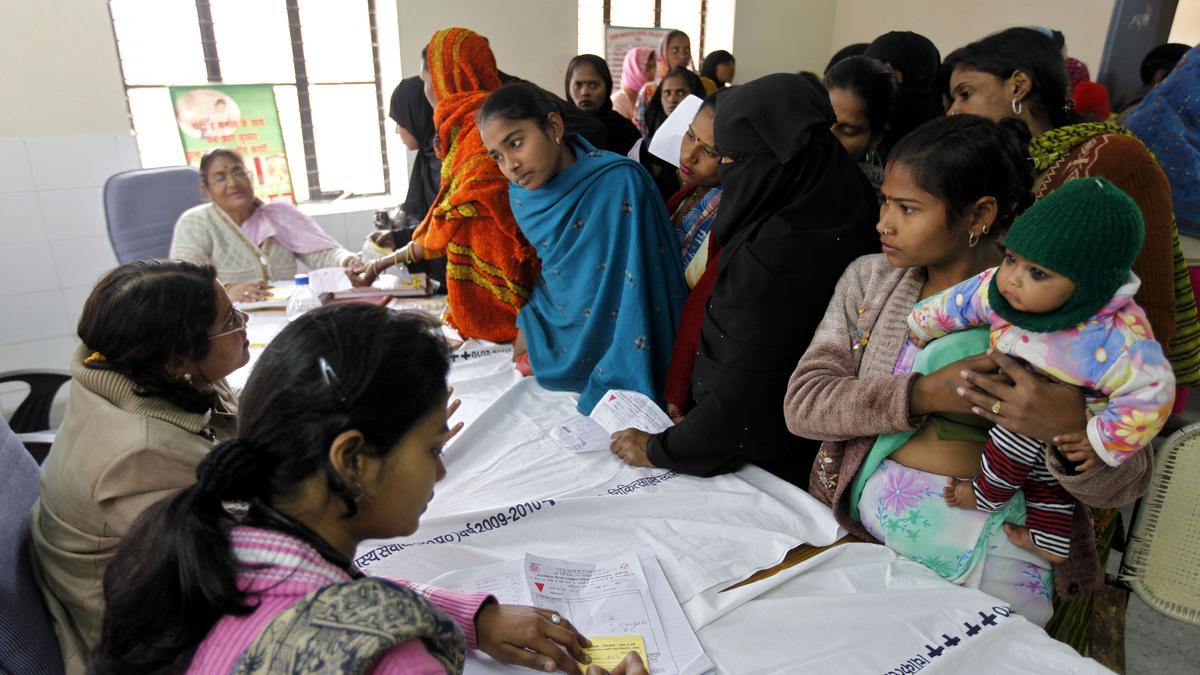
- 11 Sep 2025
In News:
The Sample Registration System (SRS) Statistical Report 2023, released by the Office of the Registrar General & Census Commissioner (ORGI), provides crucial insights into India’s demographic transition. The report highlights notable shifts in fertility, mortality, and ageing patterns, underlining both progress and challenges in population dynamics.
Key Findings of SRS 2023
1. Total Fertility Rate (TFR)
- India’s TFR declined to 1.9 in 2023, falling below the replacement level of 2.1 children per woman.
- This marks the first decline in two years, reflecting sustained fertility reduction.
- State variations:
- Highest TFR: Bihar (2.8 among larger states).
- Lowest TFR: Tamil Nadu (well below replacement).
- 18 States/UTs reported TFR below replacement level, indicating an advancing demographic transition.
2. Crude Birth Rate (CBR)
- The national CBR declined from 19.1 (2022) to 18.4 (2023).
- State-wise extremes:
- Bihar: 25.8 (highest).
- Tamil Nadu: 12 (lowest).
3. Infant Mortality Rate (IMR)
- India’s IMR touched a historic low of 25 per 1,000 live births in 2023, down significantly from 40 in 2013.
- The decline highlights improvements in maternal and child healthcare.
4. Sex Ratio at Birth (SRB): The SRB stood at 917 girls per 1,000 boys, reflecting persistent gender imbalance despite gradual improvements in many regions.
5. Ageing Population
- Seniors (aged 60+) constitute 9.7% of the population, up from 8.6% in 2011.
- State variation: Kerala leads with nearly 15% elderly population, indicating advanced population ageing.
Significance of the Trends
- Demographic Transition:The fall in fertility and birth rates confirms India’s movement towards a stabilising population, with many states already below replacement fertility.
- Public Health Gains:The sharp fall in IMR highlights the impact of government interventions in maternal health, institutional deliveries, and immunisation.
- Gender Challenges:A low SRB underscores continuing son preference and gender discrimination, raising concerns for long-term demographic balance.
- Ageing Burden:Rising share of the elderly, especially in southern states, signals the need for social security, geriatric healthcare, and pension reforms.
Environment Auditors
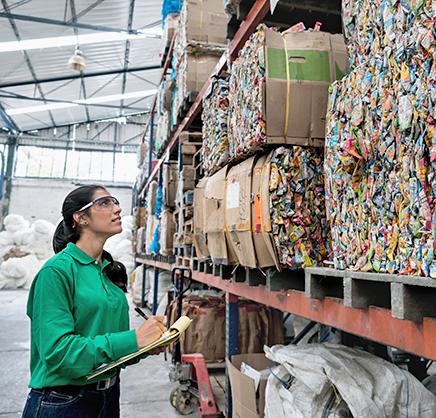
- 11 Sep 2025
In News:
The Ministry of Environment, Forest and Climate Change (MoEFCC) has notified the Environment Audit Rules, 2025, authorising the creation of a new, independent cadre of environment auditors. This marks a significant reform in India’s environmental governance framework, aiming to strengthen compliance, accountability, and transparency in monitoring ecological regulations.
Background and Rationale
Environmental monitoring in India is primarily overseen by the Central Pollution Control Board (CPCB), Regional Offices of MoEFCC, and State Pollution Control Boards (SPCBs)/Pollution Control Committees (PCCs). However, these bodies face persistent challenges of manpower shortage, limited resources, and infrastructural constraints, which hinder effective enforcement across the vast number of industries and projects.
To address this gap, the government has introduced environment auditors—certified professionals or accredited private agencies—who can supplement regulatory agencies in compliance verification. This is expected to enhance the implementation of environmental laws while promoting self-regulation by industries.
Key Features of Environment Auditors
- Legal Basis: Established under the Environment Audit Rules, 2025.
- Nature: Independent class of licensed professionals/agencies accredited to inspect, verify, and audit industrial and infrastructure projects.
- Functions:
- Conduct systematic environmental audits of projects under existing environmental laws.
- Sample and analyse emissions, effluents, and waste.
- Report non-compliance and compute environmental compensation.
- Act as verifiers under multiple regulatory frameworks, including the Green Credit Rules, E-Waste Rules, and Plastic Waste Rules.
- Provide independent data for climate action planning, ESG ratings, and sustainable development initiatives.
Linkage with Green Credit Rules
Audits by these accredited agencies will also support compliance with the Green Credit Rules, 2023, which incentivise activities like afforestation, water management, waste reduction, and pollution control through tradable “green credits.” Environment auditors will thus act as third-party verifiers, ensuring credibility in the crediting process.
Significance of the Reform
- Bridges Institutional Deficits: Addresses manpower and infrastructure shortages in SPCBs and CPCB.
- Promotes Accountability: Encourages industries to adopt self-compliance mechanisms rather than relying solely on regulatory enforcement.
- Enhances Transparency: Independent, third-party verification fosters stakeholder trust in environmental governance.
- Strengthens Climate Commitments: Provides robust compliance data for India’s climate action goals and sustainability reporting.
- Reduces Regulatory Burden: Eases the monitoring load on overstretched government agencies.
Particularly Vulnerable Tribal Groups (PVTGs)
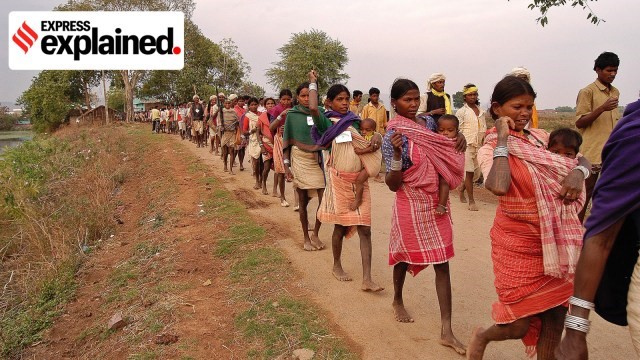
- 11 Sep 2025
In News:
- The Ministry of Tribal Affairs (MoTA) has requested the Registrar General and Census Commissioner of India (RGI) to enumerate Particularly Vulnerable Tribal Groups (PVTGs) separately in the upcoming Census.
- Aim: To capture population, households, and distinctive socio-economic and cultural features of PVTGs for better targeting of schemes such as the Pradhan Mantri Janjati Adivasi NyayMaha Abhiyan (PM JANMAN).
About PVTGs
- Definition: A sub-category of Scheduled Tribes (STs), considered the most disadvantaged among tribal communities.
- Origin: Concept recommended by the Dhebar Commission (1960–61) to address disparity within STs.
- Criteria for Identification:
- Declining/stagnant population
- Geographical isolation
- Pre-agrarian economy (hunting, gathering, shifting cultivation)
- Economic backwardness
- Low literacy
- Numbers:
- Initially 52 groups identified during the Fifth Five-Year Plan (1974–79).
- Later, 23 more groups added in 2006 → 75 PVTGs today.
- Spread: Across 18 states and the Andaman & Nicobar Islands.
Demographic Profile
- Estimated Population (2023 Survey): ~47.5 lakh PVTGs in India.
- Madhya Pradesh – 13.22 lakh (highest)
- Maharashtra – 6.7 lakh
- Andhra Pradesh – 5.18 lakh
- Smallest Groups: Sentinelese (Andaman & Nicobar Islands) with just 15 individuals.
- Largest Group: Baiga (Madhya Pradesh) – ~4.14 lakh population.
Habitat & Livelihoods
- Mostly live in remote forests, hilly regions, or islands with limited access to infrastructure.
- Livelihood sources:
- Hunting and gathering
- Shifting cultivation
- Non-Timber Forest Produce (NTFP) collection
- Livestock rearing
- Traditional artisan work
Cultural & Social Features
- Distinct cultural identities, practices, and languages.
- Often outside mainstream socio-economic and political processes.
- Many face critical health and education deficits.
Need for Separate Enumeration
- No separate count so far: PVTGs only enumerated under the general ST category; many grouped together under one nomenclature.
- Single-entry STs: Out of 75 PVTGs, 40 explicitly listed under Article 342 of the Constitution.
- Challenges: Current lists vary across states; some groups not separately listed in Census.
- Benefits of separate enumeration:
- Accurate population data for targeted schemes.
- Helps assess whether PVTG classification criteria remain relevant.
- Supports preservation of cultural identity.
- Identifies infrastructure gaps in health, education, and livelihoods.
Welfare Measures
- PM JANMAN Scheme (2023):
- Budget: ?24,104 crore.
- Coverage: More than 200 districts.
- Objective: Improve health, education, livelihoods, and basic amenities of PVTGs.
2D Materials
- 11 Sep 2025
In News:
- NITI Aayog’sFrontier Tech Hub, in collaboration with IISc Bengaluru, released the 4th edition of FutureFront Quarterly Insights titled “Introduction to 2D Materials”.
- Report highlights the need for India to invest early in 2D materials to lead in semiconductors, quantum technologies, and advanced electronics.
What are 2D Materials?
- Definition: Materials that are one atom thick, with unique electrical, thermal, and mechanical properties.
- Discovery: Graphene isolated in 2004 → Nobel Prize in Physics, 2010.
- Examples:
- Graphene (Carbon-based)
- Transition Metal Dichalcogenides (TMDCs) –MoS?, WS?
- Hexagonal Boron Nitride (h-BN)
- Xenes – Silicene, Phosphorene
Key Properties
- ~200× stronger than steel, yet flexible.
- Conducts electricity better than copper; spreads heat efficiently.
- Tunable band gaps → useful for semiconductors.
- Exhibits quantum effects (e.g., spin–valley coupling).
- Transparent & flexible → foldable/wearable electronics.
Applications
- Semiconductors: Chips up to 10× smaller than silicon-based chips.
- Quantum Computing: Hosting qubits, spin–valley interactions.
- Artificial Intelligence: Atom-thin memristors for neuromorphic computing.
- Optoelectronics: LEDs, photodetectors, ultra-thin solar cells.
- Green Tech: EV batteries, water filtration, aerospace composites.
Significance for India
- Tech Geopolitics: Control over supply chains and standards creates “tech choke points.”
- Challenge: Current reliance on licensed technologies → dependency (“umbilical cord” risk).
- Opportunity: Early push in 2D materials offers first-mover advantage in semiconductors.
- Global Status: USA, China, Japan, South Korea already investing heavily.
Policy Measures
- NITI Aayog: Urges creation of a complete 2D ecosystem – R&D, talent, supply chains, standards, manufacturing.
- MeitY& DST: Invited proposals for R&D and product development in 2D materials.
India–Singapore Comprehensive Strategic Partnership (CSP): 2025 Roadmap
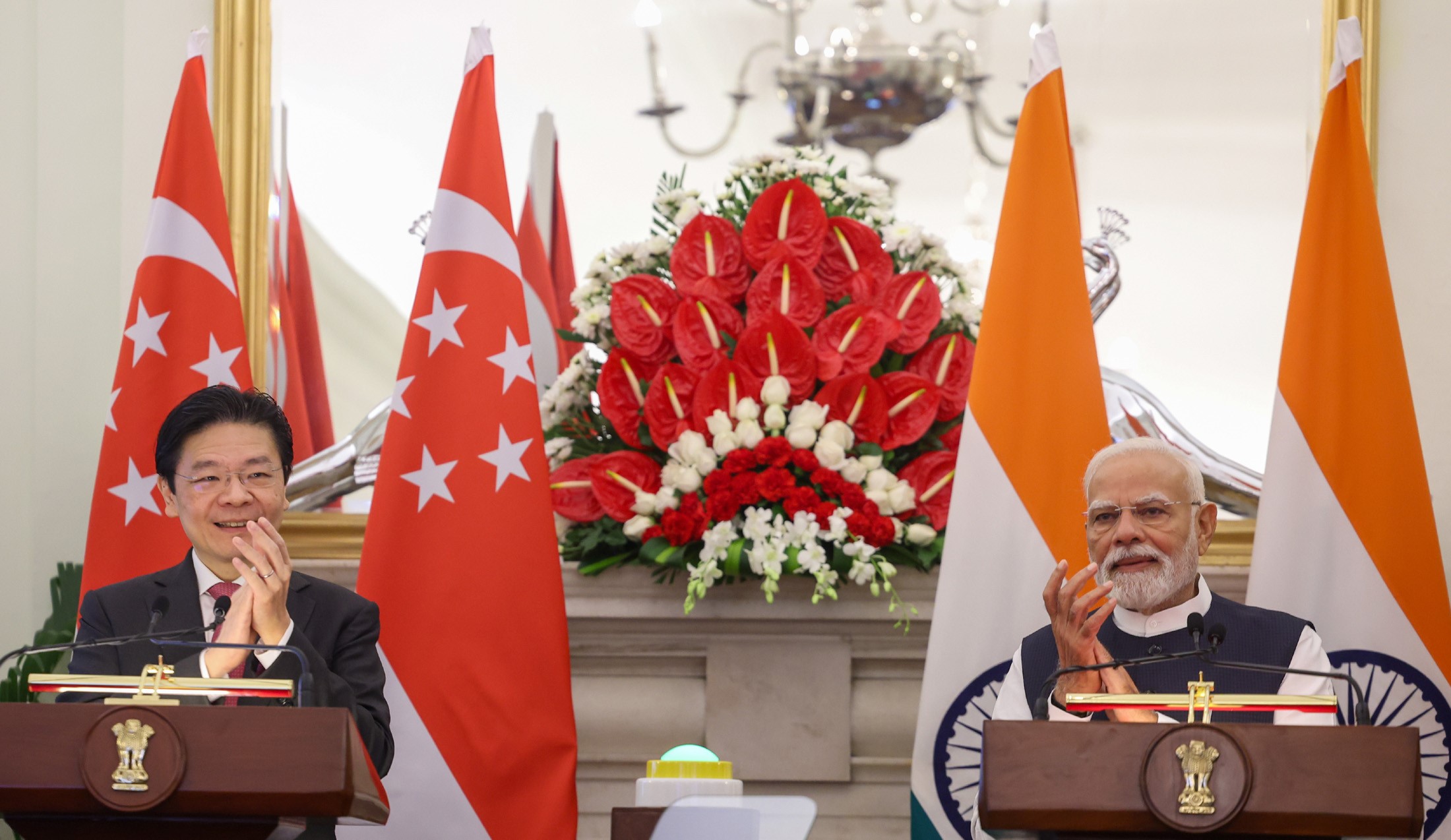
- 10 Sep 2025
In News:
The visit of Singapore Prime Minister Lawrence Wong to India in September 2025 marked 60 years of diplomatic relations and culminated in the adoption of a forward-looking Comprehensive Strategic Partnership (CSP) Roadmap. This elevates bilateral ties beyond trade to encompass technology, security, sustainability, and people-centric cooperation, reinforcing Singapore’s role as a vital partner in India’s Act East Policy and Indo-Pacific vision.
What is CSP?
- The Comprehensive Strategic Partnership (CSP) is the highest level of bilateral engagement between India and Singapore.
- It was elevated from a Strategic Partnership in 2015, and deepened further in 2025 through the adoption of a roadmap across eight key sectors.
Eight-Pillar Cooperation Framework
- Economic Cooperation
- Review of Comprehensive Economic Cooperation Agreement (CECA) and ASEAN-India Trade in Goods Agreement (AITIGA) in 2025.
- Partnership in semiconductors: Singapore produces 10% of global semiconductors and 20% of semiconductor equipment—key to India’s domestic chip manufacturing ambitions.
- Cooperation in industrial parks, sustainable manufacturing, capital market connectivity (NSE-IFSC-SGX GIFT Connect), and space collaboration.
- Skills Development
- Establishment of the National Centre of Excellence for Advanced Manufacturing in Chennai.
- Joint efforts in Technical and Vocational Education and Training (TVET), skill certification, train-the-trainers programmes, and nursing skill cooperation (expansion of the Singapore–Assam model).
- Digitalisation
- Expansion of UPI–PayNow linkage for seamless cross-border payments.
- Collaboration in fintech, cybersecurity, AI applications (healthcare, agriculture), start-up ecosystems, and adoption of TradeTrust for e-Bills of Lading in trade documentation.
- Sustainability & Green Growth
- Cooperation in green hydrogen, ammonia, and civil nuclear energy.
- Joint climate initiatives under Article 6.2 of the Paris Agreement.
- Collaboration in the International Solar Alliance (ISA) and Global Biofuels Alliance.
- Partnership in food security, agricultural exports, and water management.
- Connectivity
- Establishment of an India–Singapore Green and Digital Shipping Corridor linking major Indian ports with Singapore.
- Knowledge-sharing in aviation (air services agreement, sustainable aviation fuel, MRO collaboration).
- Healthcare & Medicine
- MoU on Health and Medicine: digital health, maternal and child health, disease surveillance, and medical R&D.
- Nursing cooperation and skills training to enhance employability in Singapore.
- People-to-People & Cultural Exchanges
- Student and professional exchanges, parliamentary engagement, think tank linkages, and public service training.
- Promotion of cultural heritage and maritime history collaborations.
- Defence& Security
- Enhanced military cooperation through SIMBEX 2025 and other tri-service exercises.
- Collaboration on defence technology (AI, automation, unmanned systems, quantum computing).
- Maritime security including submarine rescue cooperation and regional patrols.
- Strengthened counter-terrorism efforts via FATF and other multilateral mechanisms.
- Singapore acknowledged India’s interest in the Malacca Straits Patrol (MSP); India’s Andaman & Nicobar Command enhances regional maritime domain awareness.
Strategic Significance
- Positions Singapore as India’s gateway to Southeast Asia and the broader Indo-Pacific.
- Enhances regional security architecture aligned with ASEAN principles.
- Demonstrates how middle powers can address global uncertainties through technology partnerships, defence collaboration, and sustainable growth initiatives.
India’s Path to Atmanirbharta in Millets
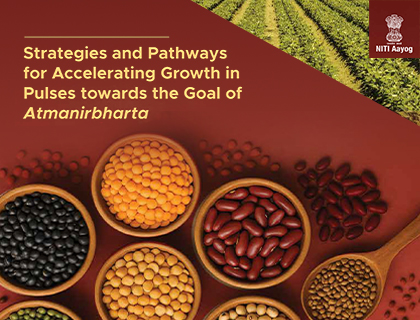
- 10 Sep 2025
In News:
The NITI Aayog report “Strategies and Pathways for Accelerating Growth in Pulses towards the Goal of Atmanirbharta” also provides broader lessons for achieving self-reliance in other food crops like millets, which face similar challenges of productivity, market stability, and sustainability.
Current Status of Millets in India
- Global Leadership: India contributes nearly 41% of world millet output (~16 million tonnes annually), making it the largest producer.
- Regional Spread: Five states—Rajasthan, Maharashtra, Karnataka, Uttar Pradesh, and Madhya Pradesh—produce over 80% of India’s millets.
- Consumption Decline: Per capita consumption has dropped from 32 kg/year in the 1960s to ~4 kg/year today, largely replaced by rice and wheat due to PDS bias.
- Exports: In 2022–23, India exported 1.8 million tonnes, mainly to UAE, Nepal, and Saudi Arabia, indicating rising global demand.
- Policy Push: The Union Budget 2023–24 renamed millets as “Shree Anna”, earmarking resources for research, processing, and marketing.
Importance of Millets
- Nutritional Security: Rich in iron, calcium, fiber, and proteins, helping fight malnutrition and anemia.
- Climate Resilience: Require 70% less water than rice and withstand drought, making them suitable for rainfed regions.
- Farmer Livelihoods: Low-input crops reduce reliance on irrigation and fertilizers, benefiting smallholders.
- Food Security: Inclusion in Mid-Day Meals, ICDS, and PDS enhances nutrition for vulnerable groups.
- Global Branding: India’s “Shree Anna” campaign has positioned millets as a superfood and strengthened agri-diplomacy.
Initiatives Taken
- NFSM-Millets: Expands area under millets, provides quality seed, and boosts productivity.
- Shree Anna Mission (2023): A six-year plan for millet research, processing, branding, and market integration.
- State Schemes: Karnataka’s Ksheera Bhagya included millets in school meals.
- International Recognition: India led the UNGA resolution declaring 2023 as International Year of Millets.
- Export Promotion: APEDA supports branding, GI tagging, and product exports to West Asia, US, and EU.
Challenges
- Consumer Preference Shift: Rice and wheat dominate diets due to PDS subsidies and cooking convenience.
- Low Productivity: Millet yields (~1.2 t/ha) remain below rice/wheat due to limited R&D and weak seed systems.
- Weak Market Linkages: Fragmented value chains, inadequate FPO presence, and absence of MSP-backed assured procurement.
- Post-Harvest Constraints: Poor processing/storage technologies and limited millet-based food industry.
- Policy Bias: NFSA subsidies for rice/wheat discourage millet adoption in rainfed belts.
Strategic Framework for Atmanirbharta
- Horizontal Expansion: Cultivate millets in rice fallows and degraded lands, especially in Eastern India.
- Vertical Expansion: Develop high-yielding, bio-fortified, climate-resilient varieties with robust seed systems.
- Cluster-Based Model: District-wise crop cluster strategy for focused interventions.
- Value Chain Integration: Establish processing hubs, branding centers, and FPO-led aggregation.
- Climate-Smart Farming: Promote organic and water-efficient millet practices, aligning with SDGs and climate goals.
National Institutional Ranking Framework
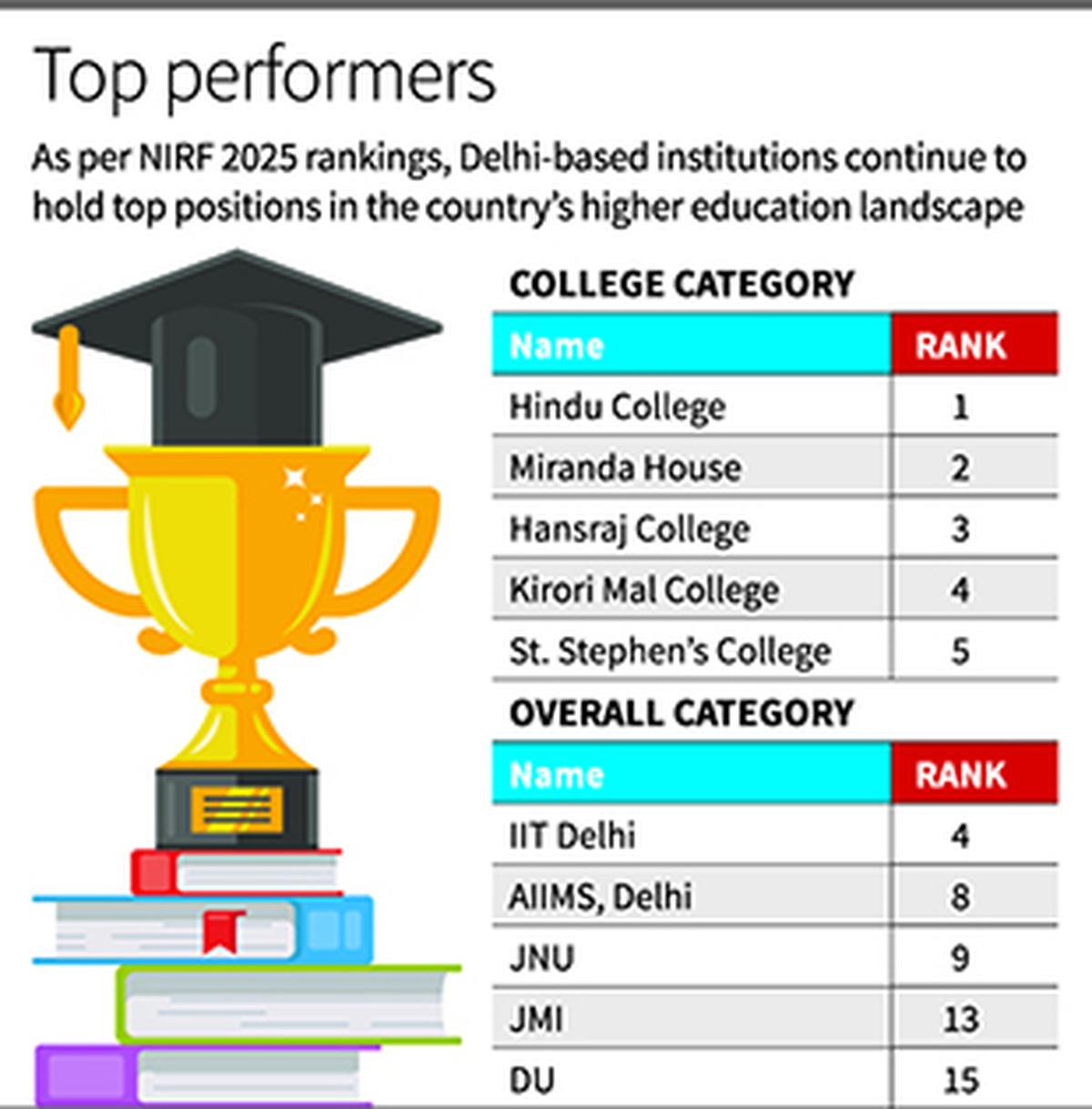
- 10 Sep 2025
In News:
The Ministry of Education has released the India Rankings 2025 under the National Institutional Ranking Framework (NIRF), first launched in 2015 to provide a transparent, data-driven methodology for ranking higher education institutions (HEIs).
Background
- Introduced in 2015 by the Ministry of Education (then MHRD).
- First rankings released in 2016 with one category (Universities) and three domains (Engineering, Management, Pharmacy).
- Now expanded to 9 categories and 8 subject domains, with SDG-based rankings introduced in 2025.
- Aim: To benchmark quality, ensure accountability, guide students/parents, and align with NEP 2020 goals of making India a knowledge superpower by 2047.
Parameters of NIRF (Weightage)
- Teaching, Learning & Resources (30%)
- Research & Professional Practice (30%)
- Graduation Outcomes (20%)
- Outreach & Inclusivity (10%)
- Perception (10%)
- Total of 19 sub-parameters used.
- Data sourced from institutions and third parties like Scopus, Web of Science, Derwent Innovation for publications, citations, and patents.
Participation & Growth
- 2025: 7,692 unique institutions applied (14,163 submissions), compared to 2,426 in 2016 – a 217% rise in participants and 297% rise in applications.
- Rankings now cover 17 categories, including overall, universities, colleges, research institutions, medical, dental, law, pharmacy, management, architecture & planning, agriculture, open universities, skill universities, state public universities, innovation, and SDGs.
Key Highlights of 2025 Rankings
- IIT Madras: Retains 1st rank in Overall category for the 7th year and Engineering for the 10th year. Also topped Innovation and SDGs categories.
- IISc Bengaluru: Ranked 1st among Universities for the 10th year; also leads in Research Institutions for the 5th year.
- IIM Ahmedabad: Topped Management for the 6th consecutive year.
- AIIMS Delhi: 1st in Medical for the 8th year; also ranked 8th in Overall. Additionally topped Dental for the first time.
- Jamia Hamdard (Delhi): 1st in Pharmacy for the 2nd year.
- IIT Roorkee: 1st in Architecture & Planning for the 5th consecutive year.
- NLSIU Bengaluru: Retains 1st position in Law for the 8th year.
- Hindu College (Delhi University): 1st among Colleges for the 2nd year, displacing Miranda House. Six of the top ten colleges are from Delhi.
- Indian Agricultural Research Institute (Delhi): 1st in Agriculture & Allied Sectors for the 3rd year.
- IGNOU (Delhi): 1st in Open Universities category for the 2nd year.
- Symbiosis Skill & Professional University (Pune): 1st in Skill Universities for the 2nd year.
- Jadavpur University (Kolkata): 1st in State Public Universities (introduced in 2024).
Significance
- NIRF has evolved into a credible national benchmark for higher education, enhancing global competitiveness, transparency, and inclusivity.
- With new categories such as Innovation, Skill Universities, and SDG rankings, it reflects India’s effort to link education with sustainability, entrepreneurship, and national development goals under NEP 2020.
- Participation trends demonstrate growing institutional acceptance of NIRF as a fair and transparent ranking mechanism.
Acanthamoeba
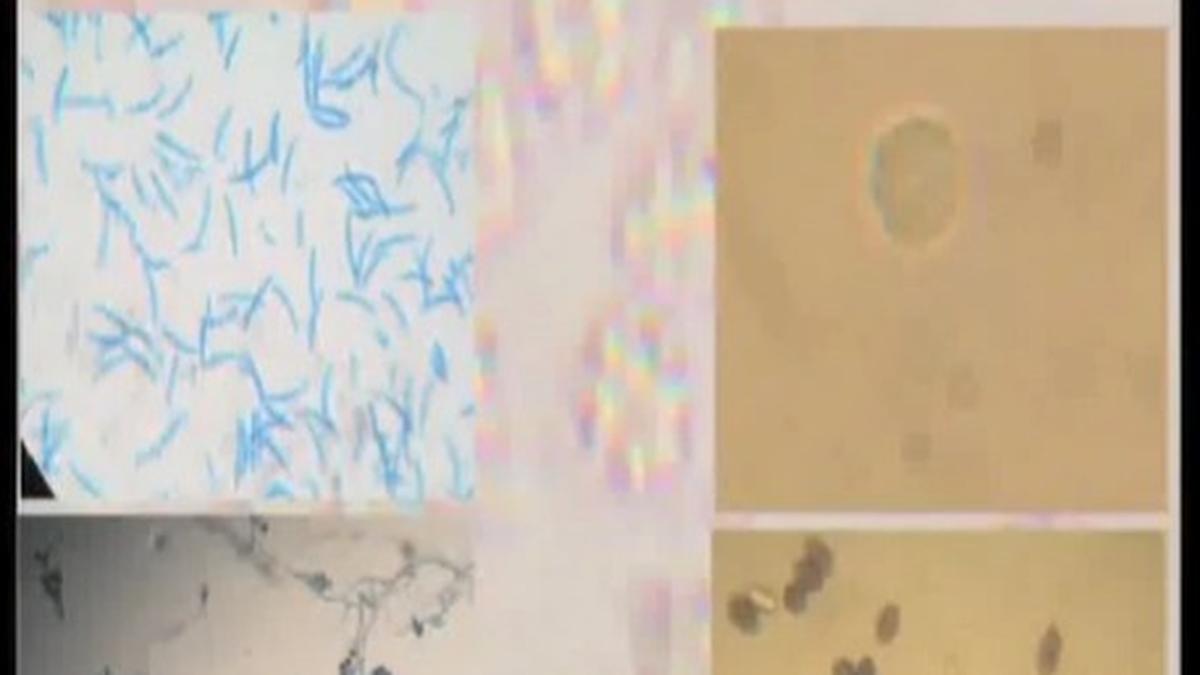
- 10 Sep 2025
In News:
Recent studies have revealed that Acanthamoeba, a free-living amoeba, is more widespread in Kerala’s waterbodies than previously believed. This raises significant public health concerns, especially due to its ability to cause severe and often fatal infections.
About Acanthamoeba
- Nature: A single-celled, free-living amoeba found in water, soil, and dust.
- Habitats: Frequently detected in swimming pools, hot tubs, household wells, drinking water systems, humidifiers, and HVAC (heating, ventilation, and air conditioning) systems.
- Mode of Transmission: Enters the human body through skin wounds, inhalation via lungs/nasal cavity, or eye exposure (notably among contact lens users).
Types of Infections
- Granulomatous Amebic Encephalitis (GAE): Affects the brain; almost always fatal.
- Cutaneous Acanthamoebiasis: Skin infection through wounds.
- Acanthamoeba Rhinosinusitis: Infection of the nasal cavity and sinuses.
- Acanthamoeba Keratitis: Serious eye infection, often in healthy individuals and contact lens users; may lead to permanent vision loss.
Kerala Case Study
- In 2013, research from the Regional Institute of Ophthalmology (Kerala) identified that several cases of non-healing corneal ulcers were due to Acanthamoeba keratitis, traced back to household wells as the infection source.
- Current findings indicate that Acanthamoeba is more widespread in Kerala’s natural and man-made waterbodies than earlier thought, heightening risks of waterborne and eye-related infections.
Significance
- The rise of Acanthamoeba-related keratitis underlines the need for safe water practices, improved eye hygiene among contact lens users, and awareness of rare pathogens.
- Its resilience across diverse environments makes it a public health challenge, especially in regions dependent on household wells and untreated water sources.
Debrigarh Wildlife Sanctuary
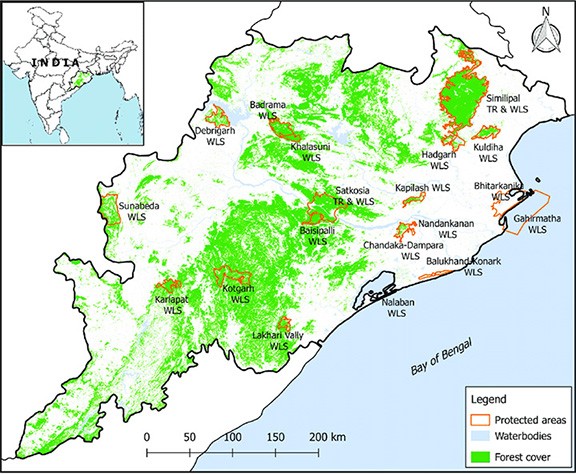
- 10 Sep 2025
In News:
Odisha’s Debrigarh Wildlife Sanctuary has recently been approved by the National Tiger Conservation Authority (NTCA) to become India’s newest tiger reserve. This marks a significant ecological achievement rooted in community participation, innovative eco-tourism, and conservation success.
Location and Geography
- Situated in western Odisha, near Sambalpur and Bargarh district, Debrigarh is bordered by the Hirakud Reservoir—a Ramsar-tagged wetland and part of the Mahanadi River system.
- The Hirakud Dam, the world’s longest earthen dam, lies adjacent to the sanctuary.
- Spread over 804 sq km, it includes around 347 sq km of core area, encompassing forests, grasslands, and wetlands, making it a unique amphi-terrestrial ecosystem.
Historical Significance
- The rugged terrain of Debrigarh was a strategic base for freedom fighter Veer Surendra Sai during his armed resistance against British colonial rule.
- Sites like Bara Bakra/Barapathara remain important heritage landmarks within the sanctuary.
Flora and Fauna
- Vegetation: Dominated by mixed and dry deciduous forests, with species such as Sal, Asana, Bija, Aanla, and Dhaura.
- Mammals: Indian bison (gaur), sambar deer, wild boar, chousingha (four-horned antelope), leopards, sloth bears, and wild dogs.
- Avifauna: Over 300 bird species, including 120 migratory species such as crested serpent eagle, drongo, tree pie, flower peckers, and white-eye oriental.
Eco-Tourism and Innovation
- Debrigarh is home to India’s first dark sky tourism hub, offering stargazing facilities.
- Adventure tourism includes safaris (53 vehicles), kayaking, cycling, and birding trails, designed with minimal ecological footprint.
Conservation and Community Model
- Declared a sanctuary in 1985 and upgraded to a tiger reserve in 2025.
- A community-led model: Over 400 families voluntarily relocated with rehabilitation packages; 155 villages actively participate in conservation and eco-tourism activities.
- Wildlife success: Expansion of prey base, increase in gaur population, and nearly 40% of herds comprising newborns, reflecting ecosystem recovery.
Significance
Debrigarh exemplifies a national model of integrated conservation, blending:
- Biodiversity protection (tiger reserve status, prey base recovery).
- Cultural heritage (legacy of Veer Surendra Sai).
- Sustainable eco-tourism (dark sky hub, water- and land-based safaris).
- Community participation (relocation and livelihood integration).
Its success offers a replicable blueprint for wildlife conservation across India, highlighting how ecological protection, heritage, and rural livelihoods can be balanced under one framework.
Majorana Particles
- 09 Sep 2025
In News:
One of the biggest challenges in quantum computing is decoherence — the tendency of qubits to lose their fragile quantum state due to environmental noise. To address this, scientists are exploring the potential of Majorana particles, exotic entities that are their own antiparticles. Their unique quantum properties may help build topological qubits, inherently resistant to errors, offering a radically new path toward practical quantum computing.
What are Majorana Particles?
- Proposed by: Italian physicist Ettore Majorana in 1937.
- Nature: A hypothetical fermion that is its own antiparticle, unlike electrons or protons which have distinct antimatter counterparts.
- Key Characteristics:
- Neutral in charge, hence elusive in detection.
- Do not annihilate on contact with themselves.
- In condensed-matter systems, they appear as quasiparticles (collective excitations) inside superconductors at ultra-low temperatures.
- Often exist in pairs: two spatially separated halves forming one quantum state.
- Exhibit non-Abelian statistics, meaning that exchanging or “braiding” them changes the overall quantum state in a predictable but unusual way.
Relevance to Quantum Computing
- Problem of Decoherence
- Qubits (quantum bits) exist in superpositions of 0 and 1, but are easily disturbed by external noise.
- Current quantum error correction requires hundreds to thousands of physical qubits to stabilise a single logical qubit, making scaling inefficient.
- Majorana-Based Solution
- Information can be encoded nonlocally across two Majorana modes.
- Disturbance of one half does not collapse the qubit; both must be affected simultaneously, making errors less likely.
- Braiding Majoranas enables topologically protected operations, where outcomes depend only on the braiding pattern and not on experimental imperfections.
- This reduces the need for massive error correction, making quantum hardware simpler and more stable.
- Current Research
- Experiments in superconducting nanowires (e.g., indium antimonide) have shown conductance patterns consistent with Majorana modes.
- However, alternative explanations exist, and conclusive proof requires demonstrating controlled braiding.
Wider Implications
- Quantum Technology: Potential to drastically lower the qubit requirement for large-scale quantum computers.
- Particle Physics: Ongoing efforts to test whether fundamental particles like neutrinos could be Majorana fermions.
- Condensed Matter Physics: Research into Majoranas has advanced material science, superconductors, and nanotechnology.
Challenges
- Experimental signals remain inconclusive, as other phenomena can mimic Majorana-like behaviour.
- Braiding demonstrations in two-dimensional architectures remain technically difficult.
- Majorana-based qubits are still at the proof-of-concept stage, not yet integrated into practical computing systems.
Self-Respect Movement
- 09 Sep 2025
In News:
The year 2025 marks the centenary of the Self-Respect Movement, a landmark social reform initiative launched by E.V. Ramasamy “Periyar” in Tamil Nadu. Emerging in 1925 through the Tamil weekly KudiArasu(Republic), the movement fundamentally reshaped Tamil society by questioning caste hierarchies, patriarchy, and religious orthodoxy, and by laying the foundations of modern Dravidian politics.
Origins and Context
- The Justice Party (South Indian Liberal Federation, 1916) had earlier challenged Brahmin dominance but remained largely confined to elite non-Brahmin interests.
- Periyar, after leaving the Indian National Congress in 1925, criticised the Justice Party for lacking a people-centric agenda and warned against creating a new non-Brahmin elite as oppressive as Brahmin oligarchy.
- Through KudiArasu,Periyar articulated a more radical vision — shifting reform efforts towards the common masses and framing an agenda of rationalism, equality, and self-respect.
Core Ideas and Aims
The Self-Respect Movement stood for:
- Abolition of caste hierarchy and Brahmanical dominance.
- Promotion of rationalism over religious superstition and ritualism.
- Assertion of dignity and equality for all individuals, irrespective of caste or gender.
- Social reform over political independence — unlike the Congress-led freedom struggle, which the movement saw as tied to Hindu orthodoxy.
Key Features and Reforms
- Self-Respect Marriages – Conducted without priests or rituals, challenging caste and religious authority.
- Women’s Rights – Advocacy of widow remarriage, right to divorce, property rights, reproductive choice (including abortion), and women’s education.
- Inter-caste Unity – Promotion of inter-caste marriages and solidarity across oppressed groups.
- Critique of Religion and Nationalism – Rejection of Gandhi’s “religion-tinted nationalism” and the Congress as a bastion of caste Hindu interests.
- Dravidian Identity – Assertion of Tamil/Dravidian identity and resistance to Sanskritichomogenisation.
Impact and Legacy
- Mass Awakening: Instilled pride and self-respect among non-Brahmin masses, transforming them from passive subjects of reform to active participants.
- Foundation for Dravidian Politics: Evolved into the DravidarKazhagam (DK) and inspired political parties like DMK and AIADMK, shaping Tamil Nadu’s welfare-driven governance model.
- Gender and Social Justice: Pioneered radical reforms in marriage, family, and gender relations, decades ahead of mainstream Indian discourse.
- Intellectual Tradition: Drew inspiration from earlier reformers such as IyotheeThass, Jyotirao Phule, and B.R. Ambedkar, situating Tamil Nadu in a wider anti-caste, rationalist movement.
Contemporary Relevance
As the movement enters its centenary in 2025, it resonates amid debates over Hindutva, cultural homogenisation, and caste discrimination. Its emphasis on rationalism, social equality, and grassroots empowerment continues to provide a counter-narrative to exclusivist identities and remains vital for advancing social justice and constitutional morality in India.
Senna spectabilis
- 09 Sep 2025
In News:
Invasive alien species are among the biggest threats to global biodiversity, ecosystem balance, and local livelihoods. In South India, Senna spectabilis, introduced in the 1980s for ornamental and fuelwood purposes, has emerged as a serious ecological challenge. Its unchecked spread across the Nilgiri Biosphere Reserve (NBR) has disrupted native ecosystems, escalated human-wildlife conflicts, and triggered large-scale forest degradation.
AboutSenna spectabilis
- Origin: Native to tropical America.
- Common Names: Popcorn Bush Cedar, Archibald's Cassia, Golden Shower, Fetid Cassia, etc.
- Characteristics: Grows 7–18 metres tall, forms dense sterile thickets, alters soil chemistry, suppresses native vegetation, and deprives herbivores of food.
- Confusion: Resembles Kerala’s state flower Cassia fistula (Kanikkonna), aiding its popularity in afforestation drives.
- IUCN Status: Classified as Least Concern.
- Challenge: Prolific seed production (up to 6,000 seeds annually), viability for nearly a decade, and quick regrowth even after cutting.
Ecological and Social Impacts
- Biodiversity Loss – Chokes out native species, prevents natural regeneration, and alters ecosystem dynamics.
- Food Chain Disruption – Loss of grasses and shrubs reduces prey availability for carnivores.
- Human-Wildlife Conflict – Decline in herbivore populations forces elephants, tigers, and deer to enter human settlements.
- Forest Degradation – Spread across Wayanad, Bandipur, and Mudumalai wildlife regions, threatening one of Asia’s most critical wildlife corridors.
- Spread Beyond South India – Reports of infestation in Andhra Pradesh, Goa, and Maharashtra.
A 2021 Rufford Foundation study showed Senna had spread over 23% of Wayanad Wildlife Sanctuary, now estimated at 40%.
Kerala’s “Wayanad Model” of Restoration
Kerala pioneered India’s first science-based, community-led eradication program at Tholpetty range, Wayanad Wildlife Sanctuary:
- Scale: 383 acres cleared; 46,450 trees uprooted; total eco-restoration covers 560 acres.
- Innovation: A lightweight hand-held uprooting tool designed by a marine engineer enabled complete root removal.
- Community Participation: Tribal youth (Kurichiya, Kattunaikka) trained as forest restoration guardians.
- Biodiversity Revival:
- 80 native tree species replanted.
- 15 indigenous grasses naturally regenerated.
- 184 bird species recorded in post-restoration zones.
- Return of elephants and deer to reclaimed patches.
This approach of “un-planting mistakes” emphasizes uprooting rather than cutting, ensuring long-term ecological recovery.
Policy and Replication
- Cross-border Extension: Karnataka adopted the Wayanad model in Nagarhole Tiger Reserve (DB Kuppe range). Tamil Nadu is exploring similar interventions.
- Utilisation of Biomass: Pilot projects have converted Senna wood into 6,000 tonnes of paper pulp; however, experts caution that biomass use alone will not halt invasion unless roots are fully removed.
- Other Invasives: The Senna challenge mirrors broader issues with Lantana, Eupatorium, and Acacia, which silently erode ecosystems across India.
Invasive Species
- Definition: An invasive species is a non-native organism that causes ecological, economic, or health harm in a new environment.
- Introduction Pathways: Ballast water of ships, aquaculture, ornamental planting, and accidental releases.
- Impacts: Extinction of native species, biodiversity loss, ecosystem degradation, and livelihood disruptions.
Graphite Spyware
- 09 Sep 2025
In News:
The Trump administration has unfrozen a stalled Biden-era contract with Paragon Solutions, granting the US Immigration and Customs Enforcement (ICE) access to its spyware tool Graphite. The contract, worth $2 million, was initially signed in September 2024 under the Department of Homeland Security (DHS) but paused due to concerns over violating the March 2023 executive order restricting spyware procurement.
About Graphite Spyware
- Nature: Advanced spyware capable of remote mobile phone access and control.
- Capabilities:
- Access photos, messages, and location data.
- Intercept encrypted communications (WhatsApp, Signal).
- Convert device into a listening tool by manipulating its microphone.
Paragon Solutions and Background
- Founded in Israel; co-founded by former PM Ehud Barak.
- Acquired in late 2024 by AE Industrial Partners (Florida) for $900 million.
- AE also owns REDLattice, a cyber-intelligence firm with ex-CIA officials.
- Track record:
- Claims to sell only to governments and law enforcement agencies for crime prevention.
- Terminated contract with Italy (Feb 2025) after WhatsApp (Meta) flagged misuse against journalists and activists in 24 countries.
Concerns and Implications
- Civil liberties: May expand ICE’s surveillance on undocumented immigrants, raising due process concerns.
- Rights at risk: Free speech and privacy could be undermined if spyware is misused.
- Expert view: Nadine Farid Johnson (Knight First Amendment Institute) warned that bypassing vetting requirements threatens constitutional safeguards.
Understanding Spyware
- Definition: Malicious software that collects data from devices and transmits it without user consent.
- Common Types:
- Adware: Tracks user activity, sells data to advertisers.
- Infostealers: Extracts sensitive data, including chats and files.
- Keyloggers: Record keystrokes, capturing passwords and personal information.
Niveshak Didi- Phase II
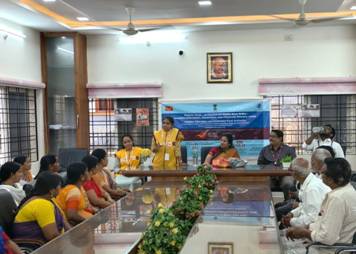
- 09 Sep 2025
In News:
The Investor Education and Protection Fund Authority (IEPFA), under the Ministry of Corporate Affairs, has launched Phase II of its flagship financial literacy initiative,Niveshak Didi, in Hyderabad. The program targets rural communities, with a special emphasis on women’s financial empowerment.
Objective and Significance
- Aim: To deepen financial awareness and enable women to make informed financial decisions, safeguard savings, and actively participate in the financial ecosystem.
- Approach: Based on the principle of “women for women”, recognizing that rural women are more comfortable discussing financial matters with female educators.
- Significance: Acts as a catalyst for bridging knowledge gaps, building confidence, and promoting financial resilience in rural communities.
Launch Highlights
Key points from the launch:
- Financial literacy sessions were conducted in Telugu to facilitate understanding.
- Emphasis on fraud prevention, safe investments, and digital financial literacy.
- IPPB’s extensive rural network ensures last-mile delivery of financial education and services.
Key Features of Phase II
- Expanded outreach to more villages and rural areas.
- Interactive training modules to improve engagement.
- Collaboration with grassroots organizations for maximum impact.
- Focus on savings, investment safety, fraud prevention, and digital transactions.
About IEPFA
- Established: 2016 under the Companies Act, 2013
- Functions:
- Manage the Investor Education and Protection Fund (IEPF)
- Facilitate refunds of unclaimed dividends, shares, matured deposits, and debentures
- Promote financial literacy and investor protection
- Major Initiatives:Niveshak Didi, Niveshak Panchayat, NiveshakShivir
Unique Disability ID (UDID) Scheme
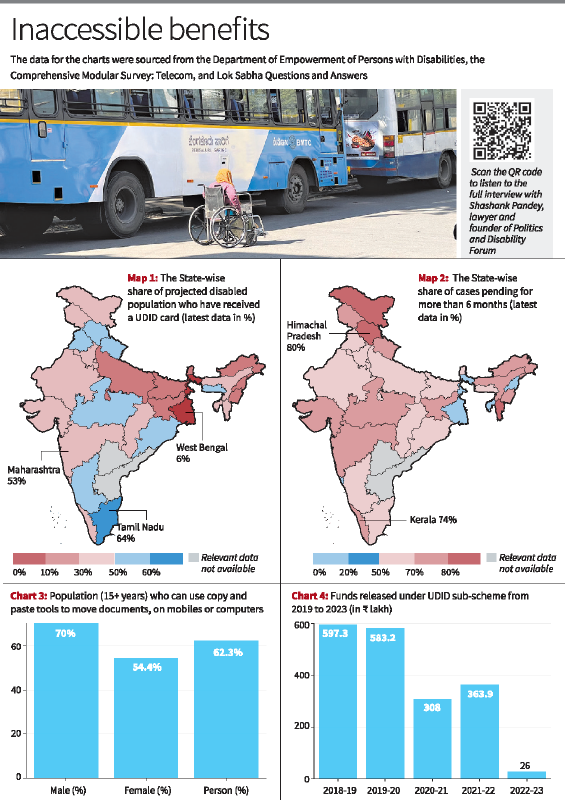
- 08 Sep 2025
In News:
The Unique Disability ID (UDID) project, launched by the Department of Empowerment of Persons with Disabilities (DEPwD), Ministry of Social Justice and Empowerment, aims to create a national database of Persons with Disabilities (PwDs) and provide them with a single identification document that is valid across the country. Despite its importance, recent data highlight serious gaps in its coverage and implementation.
Current Status and Coverage
- Less than 40% of India’s projected PwD population have been issued UDID cards.
- Over 11 lakh applications remain pending, with more than 60% delayed for over six months.
- In most States, fewer than half of PwDs possess the card; only Tamil Nadu, Meghalaya, Odisha, and Karnataka have crossed the 50% coverage mark.
- West Bengal stands out with an extremely low coverage of around 6%.
- Data for Andhra Pradesh and Telangana were unavailable separately.
Features of the UDID Card
- Structure: An 18-character alphanumeric ID, encoding details such as state, district, disability type, year of birth, and a security checksum.
- Types of Cards (based on disability percentage):
- White: Below 40% disability.
- Yellow: 40%–80% disability.
- Blue: Above 80% disability.
- Issuance: Authorized by district hospitals or the hospital where the PwD is undergoing treatment, under the Rights of Persons with Disabilities (RPwD) Act, 2016.
Objectives of the UDID Project
- Creation of a centralized, nationwide database of PwDs.
- Elimination of duplicate records and ensuring portability across States.
- Online and offline submission of applications, with provision for renewal and updates.
- Tracking of physical and financial progress of beneficiaries through an integrated Management Information System (MIS).
- Facilitation of access to benefits under schemes such as:
- ADIP Scheme – providing assistive devices like wheelchairs, prostheses, and hearing aids.
- Scholarships for education.
- Reservations in employment and educational institutions.
Implementation Challenges
- Delayed Processing: Over half of all applications remain pending beyond six months, with Himachal Pradesh, Ladakh, and Mizoram having the highest backlog.
- Digital Divide: The application process requires online submissions and document uploads, which excludes many due to low digital literacy. Only about 60% of Indians above 15 years can use basic digital tools; the share is even lower among women and PwDs.
- Staggered Roll-out: Earlier, States issued disability certificates locally; the transition to UDID was not communicated effectively, leading to confusion.
- Reduced Funding: While overall allocation for PwD welfare has increased, budgetary support for the UDID sub-scheme has declined, constraining outreach.
- Political Marginalization: PwDs constitute only 2.68 crore people (2011 Census), making them a relatively small political constituency. This reduces policy priority, as their collective influence on electoral outcomes is limited.
Significance
- Welfare Access: UDID acts as a gateway to schemes, ensuring uniformity and portability across States.
- Data-Driven Policy: Enables real-time monitoring and evidence-based policymaking.
- Administrative Efficiency: Prevents duplication and leakages in welfare delivery.
- Social Inclusion: Supports the objectives of the RPwD Act, 2016 and aligns with India’s commitments under the UN Convention on the Rights of Persons with Disabilities (UNCRPD).
Incentive Scheme to Promote Critical Mineral Recycling
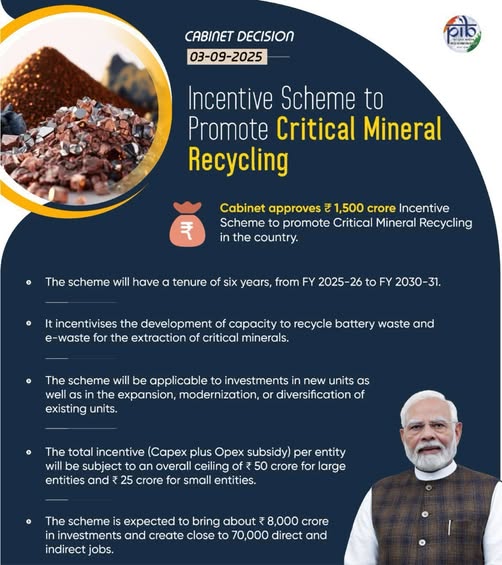
- 08 Sep 2025
In News:
- The Union Cabinet has approved a ?1,500 crore Incentive Scheme to promote critical mineral recycling in India, marking a significant step towards reducing import dependence and ensuring sustainable supply chain resilience.
- The scheme forms part of the broader National Critical Mineral Mission (NCMM), which seeks to build domestic capacity in exploration, mining, acquisition of foreign assets, and recycling of critical minerals.
Key Features of the Scheme
- Tenure: Six years, from FY 2025-26 to FY 2030-31.
- Outlay: ?1,500 crore.
- Eligible Feedstock:
- E-waste
- Lithium-ion battery (LIB) scrap
- Other scrap sources such as catalytic converters from end-of-life vehicles.
- Beneficiaries:
- Large, established recyclers.
- Small/new recyclers and start-ups (allocated one-third of scheme outlay).
- Applicability: Investments in new units, as well as expansion, modernization, or diversification of existing units.
Incentive Structure
- Capex Subsidy:
- 20% subsidy on plant, machinery, equipment, and utilities for projects that commence production within the stipulated timeframe.
- Delays will lead to reduced subsidies.
- Opex Subsidy:
- Linked to incremental sales over FY 2025-26 baseline.
- 40% subsidy in the 2nd year (FY 2026-27).
- 60% subsidy in the 5th year (FY 2030-31), subject to achieving threshold sales.
- Ceilings per Entity:
- Large recyclers – ?50 crore (with ?10 crore cap on Opex subsidy).
- Small recyclers/start-ups – ?25 crore (with ?5 crore cap on Opex subsidy).
- Scope: Incentives are limited to the extraction of critical minerals, not just black mass production.
Expected Outcomes
- Development of 270 kilotons of annual recycling capacity.
- Production of around 40 kilotons of critical minerals annually.
- Mobilization of about ?8,000 crore investment.
- Creation of nearly 70,000 direct and indirect jobs.
Significance
- Strategic Minerals Security: Provides near-term solutions to bridge supply-demand gaps until new mines and foreign acquisitions materialize.
- Circular Economy Boost: Promotes recycling of high-value e-waste and LIB scrap, reducing environmental load.
- Atmanirbhar Bharat: Strengthens domestic industries in electronics, renewable energy, and EV sectors by ensuring reliable access to lithium, cobalt, nickel, and other critical minerals.
- Inclusivity: Special provisions for start-ups and small recyclers to encourage innovation and wider participation.
Matanomadh in Kutch
- 08 Sep 2025
In News:
- A remote village in Gujarat’s Kutch district, Matanomadh, is emerging as a potential analogue site for India’s future Mars missions.
- Researchers from the Space Applications Centre (ISRO), Savitribai Phule Pune University, and the Birbal Sahni Institute of Palaeosciences have confirmed the presence of jarosite, a mineral also discovered on Mars, making the region significant for planetary studies.
Jarosite and Its Relevance
- Composition: Jarosite is a yellow-brown mineral composed of potassium, iron, and sulphate, typically formed in arid, saline environments under extreme geochemical conditions.
- Formation: On Earth, it is linked to volcanic activity, where volcanic ash containing sulphur reacts with water-rich environments.
- Global Occurrence: Rare on Earth; found in Mexico, Canada, Japan, Spain, USA (Utah, California), and in India at Kerala’s Varkala cliffs and now Kutch.
- On Mars: First detected in 2004 by NASA’s Opportunity Rover at Meridiani Planum, jarosite is considered strong evidence of water activity on the red planet.
The Kutch Discovery
- Age: Jarosite deposits at Matanomadh have been dated to around 55 million years ago (Paleocene period).
- Geological Significance: Indicates that environmental and chemical conditions in Kutch millions of years ago resembled those on Mars.
- Current Findings: The mineral occurs as fine deposits mixed with clay. When mixed with water, this clay expands—closely resembling Martian sulphate-clay formations.
Importance for Space Research
- Field Analogue for Mars: The site provides a natural laboratory to test rovers, instruments, drilling, geochemistry, and astrobiology experiments for upcoming missions like Mangalyaan-2.
- Astrobiology Potential: Sulphates such as jarosite can trap organic molecules, offering clues to possible microbial life.
- Palaeo-evolution Insights: Helps decode the geological and chemical history of Mars.
- Complementary Sites: While Ladakh’s Tso Kar Valley (HOPE Mission) simulates Martian living conditions, Kutch offers geological parallels for studying surface mineralogy.
Challenges
- The site is currently waterlogged and threatened by coal mining activities in the vicinity. Scientists have urged that Matanomadh be declared a site of planetary geo-heritage to protect its unique deposits.
Foreigners Tribunals
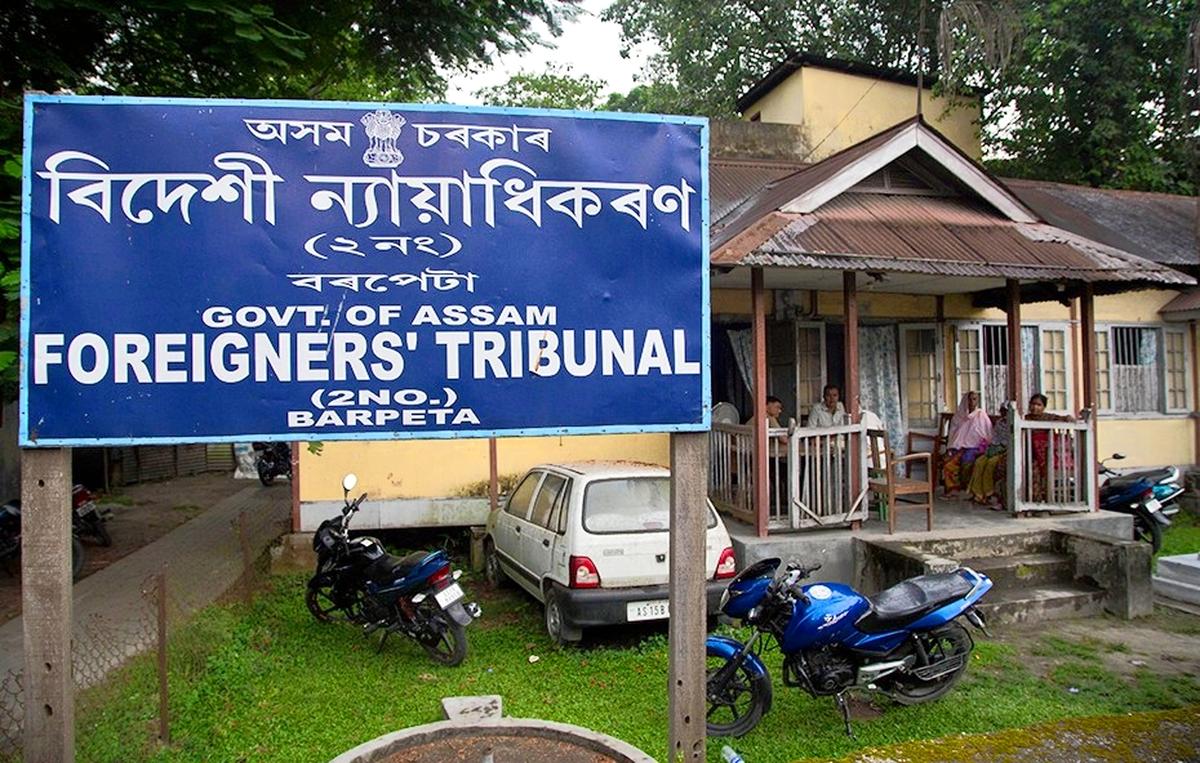
- 08 Sep 2025
In News:
The Union Home Ministry has recently empowered Foreigners Tribunals (FTs) with expanded judicial authority under the Immigration and Foreigners Act, 2025, which came into effect in September 2025. This marks a significant shift in India’s approach to dealing with suspected illegal immigrants, particularly in states like Assam.
Background
- Earlier Framework: Foreigners Tribunals were originally set up under the Foreigners (Tribunals) Order, 1964, issued under the Foreigners Act, 1946. Their main role was to determine whether a person was a foreign national.
- In Assam, such tribunals were established after the Illegal Migrants (Determination by Tribunals) Act, 1983 was struck down by the Supreme Court in 2005. Currently, around 100 FTs are functional in the state.
- Earlier, detention of declared illegal immigrants was carried out through executive orders, without direct judicial sanction.
Provisions of the 2025 Act
The Immigration and Foreigners Act, 2025 repeals older legislations and replaces the 1964 Order, giving FTs enhanced powers akin to those of a civil court and a first-class judicial magistrate.
New Powers of Foreigners Tribunals:
- Summoning and enforcing attendance of individuals and examining them under oath.
- Requiring production and verification of documents.
- Issuing commissions for the examination of witnesses.
- Directing suspects (“proceedees”) to appear in person.
- Issuing arrest warrants in case of non-appearance.
- Sending suspected or declared foreigners to detention/holding centres pending deportation.
Procedural Aspects:
- Notices are served to suspected individuals to prove their citizenship within 10 days.
- Cases are to be disposed of within 60 days of reference.
- Declared foreigners are placed in detention or transit camps until deportation.
Significance
- Strengthened Legal Framework: Brings uniformity and judicial backing to the process of identifying and detaining unauthorised foreigners.
- Due Process Assurance: Ensures quasi-judicial scrutiny before declaring an individual a foreigner.
- Regional Relevance: Particularly critical in Assam and Northeast India, which face unique challenges of cross-border migration.
- Administrative Clarity: Clearly demarcates powers between executive authorities and tribunals.
Exercise MAITREE
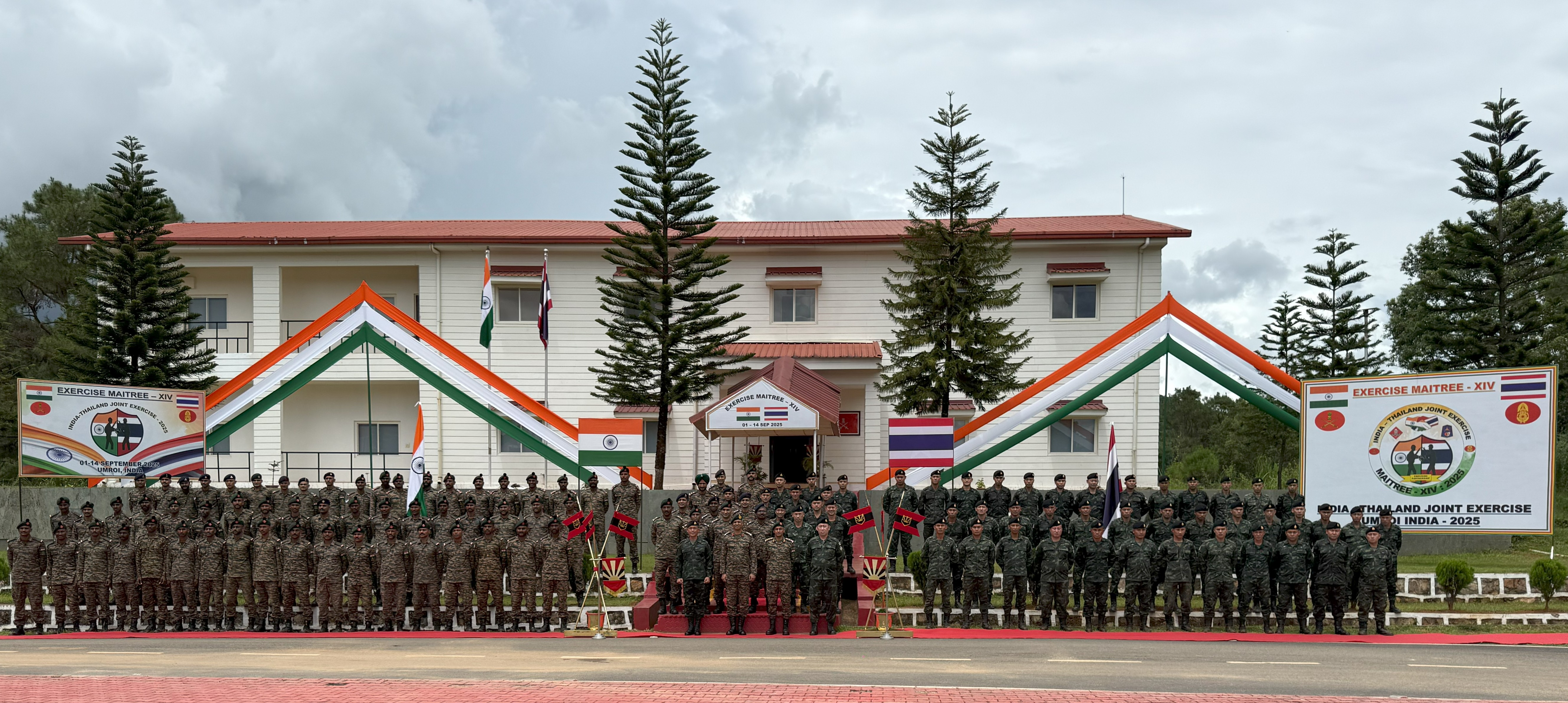
- 08 Sep 2025
In News:
The 14th edition of Exercise MAITREE-XIV, a joint military exercise between India and Thailand, commenced at the Joint Training Node (JTN), Umroi, Meghalaya.
Background
Instituted in 2006, Exercise MAITREE is a bilateral military exercise aimed at enhancing cooperation, interoperability, and mutual understanding between the Indian Army and the Royal Thai Army. The 13th edition was held at Fort Vachiraprakan, Tak Province, Thailand.
Key Features of MAITREE-XIV
- Participants:
- Indian Army – 120 personnel, represented by a battalion of the Madras Regiment.
- Royal Thai Army – 53 personnel from the 1st Infantry Battalion, 14th Infantry Brigade.
- Focus Area:
- Company-level counter-terrorist operations in semi-urban terrain, in accordance with Chapter VII of the UN Charter.
- Tactical drills, joint planning, special arms skills, physical fitness, and raiding operations.
Significance
- Reinforces bilateral defence cooperation and strengthens regional security architecture.
- Reflects the shared commitment of India and Thailand towards peace, stability, and counter-terrorism efforts.
- Enhances the operational synergy of both armies, particularly in addressing contemporary security challenges in the Indo-Pacific.
Global Peace Index (GPI) 2025
- 07 Sep 2025
In News:
The Global Peace Index (GPI) 2025, compiled by the Institute for Economics and Peace (IEP), ranked Iceland as the world’s most peaceful country, a position it has held since 2008. Covering 163 independent states and territories that represent 99.7% of the global population, the index provides a comparative measure of peace across nations.
India’s Performance
- Rank: 115th out of 163 countries.
- Score: 2.229, reflecting a 0.58% improvement over the previous year.
- Improvement Drivers: Gradual decline in domestic disputes and relative stability in societal security.
- Persistent Challenges: High militarisation, cross-border tensions, and sporadic internal unrest continue to limit India’s peacefulness score.
Global Rankings
- Top 10 Peaceful Nations (2025): Iceland, Ireland, New Zealand, Finland, Austria, Switzerland, Singapore, Portugal, Denmark, and Slovenia.
- Least Peaceful Nations: Russia, Ukraine, Sudan, Democratic Republic of Congo, and Yemen.
- Regional Highlights:
- Europe dominates the top 10 due to low crime, political stability, and strong institutions.
- South America witnessed improvements, with Argentina and Peru making notable gains.
- Sub-Saharan Africa and the Middle East remain the least peaceful, marred by civil wars, terrorism, and political instability.
Criteria of Assessment
The GPI ranks countries across 23 indicators grouped under three domains:
- Societal Safety and Security – crime rates, political stability, refugee impact.
- Ongoing Domestic and International Conflict – wars, terrorism, civil unrest.
- Militarisation – defence expenditure, arms imports/exports, armed personnel.
Global Peace Trends 2025
- The global average peacefulness has declined, primarily due to growing internal conflicts, rising militarisation, and widening geopolitical divides.
- While countries like Iceland scored consistently high due to low crime, absence of an army, and strong social trust, many regions faced setbacks with increased unrest and repression (e.g., Pakistan, Bangladesh, South Africa).
Gastrochiluspechei
- 07 Sep 2025
In News:
Researchers have discovered a new orchid species, Gastrochiluspechei, in Vijoynagar, Arunachal Pradesh, one of India’s remotest administrative circles bordering Myanmar. Until now, this orchid was known to bloom only in Myanmar, highlighting the floristic link between Arunachal Pradesh and Southeast Asia.
Key Features of Gastrochiluspechei
- Genus: Belongs to the Gastrochilus genus, first recorded in 1825, comprising 77 species spread across tropical, subtropical, and temperate Asia.
- Identification: Distinguished by short axillary inflorescence, brightly coloured flowers, a distinct epichile on the hypochile, and two porate, globose pollinia on a slender stipe.
- Habitat: Thrives in moist, evergreen rainforests, growing on small trees near riverbanks.
- Flowering Season: Blooms between September and October.
Floristic Significance
- With this finding, India now records 23 species of the Gastrochilus genus, of which 15 are from Arunachal Pradesh.
- The discovery reinforces Arunachal Pradesh’s title as the “Orchid State of India,” which harbours about 60% of the country’s orchid diversity.
- It also provides scientific evidence of the biogeographical continuity between Arunachal Pradesh and Myanmar, where the species was earlier recorded in Kachin’s Putao County.
Broader Context
Orchids are not only indicators of ecological richness but also hold significance for conservation, floriculture, and sustainable livelihoods. The discovery of Gastrochiluspechei adds to India’s botanical wealth and underscores the need to preserve fragile Himalayan ecosystems where such rare species thrive.
BHARATI Initiative
- 07 Sep 2025
In News:
The Agricultural and Processed Food Products Export Development Authority (APEDA) has launched the BHARATI initiative (Bharat’s Hub for Agritech, Resilience, Advancement and Incubation for Export Enablement) to accelerate India’s agricultural and processed food exports.
Objectives and Vision
- Empowering Startups: BHARATI will support 100 agri-food and agri-tech startups in its first pilot cohort beginning September 2025.
- Export Growth: It is aligned with APEDA’s vision of achieving $50 billion in agri-food exports by 2030.
- Innovation & Competitiveness: The initiative seeks to promote cutting-edge solutions in GI-tagged products, organic foods, superfoods, processed agri-foods, livestock, and AYUSH-based products.
Key Features
- Technology Integration: Focus on AI-based quality control, blockchain-enabled traceability, IoT-enabled cold chains, agri-fintech, sustainable packaging, and sea protocols.
- Export Challenges Addressed: Product development, value addition, perishability, wastage reduction, quality assurance, and logistics efficiency.
- Collaborative Ecosystem: Startups will be connected with agri-innovators, tech providers, and SPS-TBT focused ventures to deliver scalable, cost-effective export solutions.
- Capacity Building: Selected startups will undergo a three-month acceleration programme covering product development, export readiness, regulatory compliance, and market access.
Institutional Support
To build a strong support ecosystem, APEDA will partner with:
- State agricultural boardsand agricultural universities
- IITs, NITs, and premier research institutions
- Industry bodies and accelerators
Significance
- Strengthens India’s global competitiveness in agri-food exports.
- Promotes Atmanirbhar Bharat, Vocal for Local, Digital India, and Start-Up India missions.
- Encourages demand-driven backward integration, innovation, and sustainable food value chains.
- Creates a scalable annual incubation model, ensuring long-term growth in agricultural and processed food exports.
India Green Energy Paradox
- 07 Sep 2025
In News:
India’s energy sector is witnessing a paradoxical challenge: while 44 GW of renewable energy (RE) capacity is ready for deployment, it remains stranded due to lack of Power Purchase Agreements (PPAs), weak demand absorption, and systemic barriers. This “green energy paradox” highlights the tension between India’s global climate commitments and its domestic energy realities.
Current Energy Landscape
Despite global recognition for its renewable push, India’s energy mix remains heavily dependent on coal:
- Coal & lignite: ~79% of domestic energy (FY23).
- Renewables (excluding large hydro): Only 3.8% of domestic production.
- Oil & gas imports: Over 85% oil and 50% gas, making India highly import-dependent.
While renewable capacity is expanding, India continues to lock itself into long-term coal PPAs, raising both environmental and economic concerns.
Green Energy Paradox: Two Dimensions
1. Supply-Side Readiness
- 44 GW of RE projects are deployment-ready but idle without PPAs.
- Tariff challenges: Solar power in India remains costlier than global benchmarks due to high cost of capital, GST, duties, and import taxes.
- Storage costs: Storage-backed renewables (battery/pumped hydro) raise tariffs to ?6.6–?9/unit, making them uncompetitive against coal.
- Government interventions: Initiatives like the National Solar Mission, Hybrid Policy, Production-Linked Incentive (PLI) for batteries, and Viability Gap Funding (VGF) aim to reduce costs and promote adoption.
2. Demand-Side Weaknesses
- Discom reluctance: Financially stressed state distribution companies (discoms) prefer coal PPAs due to predictable pricing.
- Grid inflexibility: Poor transmission capacity, absence of smart meters, and weak demand-response systems hinder RE integration.
- Slow electrification: With electricity accounting for just 20% of India’s total energy consumption (vs. 28% in China), limited adoption of EVs, electric cooking, and industrial heating suppresses RE demand.
- Reliability deficit: India’s System Average Interruption Duration Index (SAIDI) stands at 600 minutes/year, compared to 35 minutes in Thailand and 46 in Malaysia, deterring energy-intensive industries.
Barriers to Integration
- Structural: Debt-ridden discoms, weak cross-subsidy frameworks, and lack of flexible grids.
- Economic: High capital costs, expensive borrowing, and unviable storage solutions.
- Environmental: Long-term coal lock-ins undermine India’s Net Zero 2070 goals, while idle RE capacity delays emissions reduction.
Initiatives Taken
- Renewable Purchase Obligations (RPOs): Mandate states to procure RE, though targets often clash with local grid capability.
- Green Open Access Rules (2022): Allow industries to directly purchase renewable power, bypassing discoms.
- National Green Hydrogen Mission: Positions hydrogen as a long-term storage solution and clean fuel.
- PLI for batteries and India Semiconductor Mission: Support indigenous storage manufacturing.
Afghanistan Earthquake
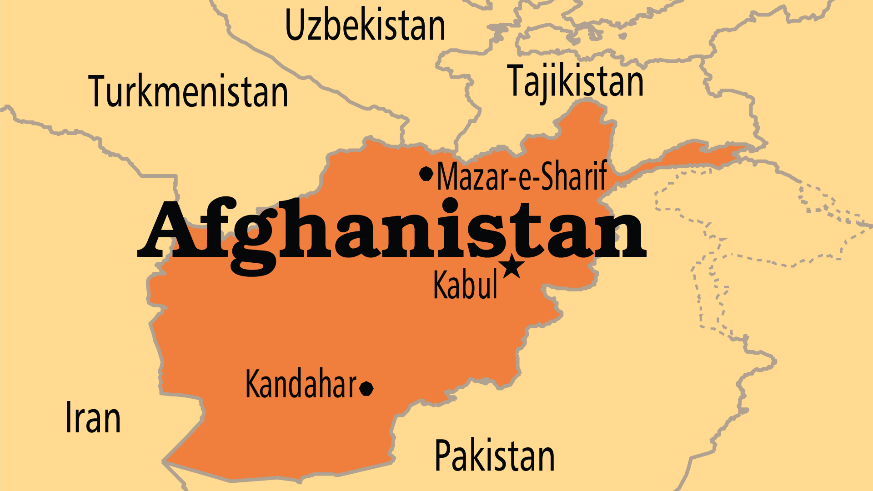
- 07 Sep 2025
In News:
A devastating 6.0-magnitude earthquake struck eastern Afghanistan near Jalalabad, killing over 800 people and injuring at least 2,800 across Kunar, Nangarhar, and Laghman provinces. The tremors, felt from Kabul to Islamabad, destroyed homes in remote mountainous regions and highlighted Afghanistan’s acute vulnerability to natural disasters.
Afghanistan’s Seismic Vulnerability
Afghanistan lies at the collision zone of the Eurasian and Indian tectonic plates, making it one of the world’s most seismically active regions. The Hindu Kush mountain range, part of the greater Himalayan system, witnesses frequent tremors. Since 1900, at least 12 earthquakes exceeding magnitude 7 have struck northeast Afghanistan.
Most Afghans live in low-rise, mud-brick dwellings, which offer little resistance to seismic shocks. With poor infrastructure, fragile governance, and limited access to technology, the human toll of disasters is amplified.
Geographic and Geostrategic Context
Afghanistan is a landlocked, multi-ethnic nation in South-Central Asia, historically situated at the crossroads of trade and power rivalries—from the “Great Game” between Britain and Russia to Cold War confrontations.
- Capital: Kabul
- Neighbours: Pakistan, Iran, Turkmenistan, Uzbekistan, Tajikistan, and China (via the narrow Wakhan Corridor).
- Geographic Features:
- Mountains: The Hindu Kush dominates, with passes like the Khyber and Shebar, linking Central and South Asia.
- Rivers: Amu Darya (north), Kabul River (tributary of Indus), Helmand (longest at 715 miles), and Hari Rud (Afghanistan–Iran boundary).
- Regions:
- Central Highlands – rugged, earthquake-prone terrain.
- Northern Plains – fertile, resource-rich areas with gas reserves.
- Southwestern Plateau – arid deserts such as Registan and Margow.
These geographical features make Afghanistan both strategically significant and highly disaster-prone.
Indian Rosewood
- 06 Sep 2025
In News:
- Indian rosewood (Dalbergialatifolia in the south and Dalbergia sissoo in the north), often referred to as the “ivory of the forests”, is prized globally for its rich grain, deep colour, and durability.
- It serves as both a premium timber resource for furniture, handicrafts, and musical instruments, and an ecologically significant species that enhances soil fertility through nitrogen fixation, supports bird and insect diversity, and acts as a long-term carbon sink.
Distribution and Habitat
- Dalbergialatifolia: Native to the Nilgiris, Anamalai, and Parambikulam ranges in Tamil Nadu, with significant habitats in Karnataka and Kerala.
- Dalbergia sissoo (North Indian rosewood): Found along the Himalayan foothills, from Afghanistan to Bihar, typically growing along riverbanks between 200–1,400 m elevation.
- Recent habitat modelling by the Institute of Wood Science and Technology (IWST), Bengaluru, using 3,224 geo-referenced points and 19 bioclimatic variables, found that only 17.2% of India’s suitable habitat lies within protected areas.
Current Status in Tamil Nadu
- Field surveys (2019–2025) by IWST and the Indian Council of Forestry Research and Education revealed that Tamil Nadu has the lowest density of rosewood in South India, with just 2.85 trees per 0.1 hectare, compared to 6.19 in Karnataka and 5.38 in Kerala.
- The populations are dominated by mature, ageing trees with little or no natural regeneration, and seedlings are rare or absent in many areas.
- The situation has worsened after the lapse of the Tamil Nadu Rosewood (Conservation) Act, 1995, which had regulated felling of rosewood for nearly three decades.
- With no renewal after February 2025, privately owned rosewood, especially in tea plantations of the Nilgiris, faces heightened risk of exploitation.
Threats
- Weak Legal Safeguards – With the lapse of State legislation, most rosewood outside protected areas is exposed to felling and land-use change.
- Climate Change – IWST modelling projects shrinking suitable habitats in coming decades, further compounding the species’ vulnerability.
- International Demand – Luxury furniture and musical instruments drive high global demand.
- Regeneration Crisis – Ageing tree populations without sufficient seedlings threaten long-term survival.
Conservation Status
- IUCN Red List: Vulnerable (since 2018).
- CITES: Appendix II (regulated trade).
- India’s Last National Assessment (2011–12): Near Threatened.
Blue Sea Dragons
- 06 Sep 2025
In News:
Recently, several beaches in Guardamar del Segura, Spain, were closed after an unusual invasion of blue sea dragons (Glaucus atlanticus), a rare but strikingly beautiful species of sea slug. Authorities imposed the ban as a precautionary measure to protect residents and tourists from potential stings.
About Blue Sea Dragons
- Taxonomy: A type of mollusk belonging to the nudibranch family.
- Other Names: Also called blue sea slugs, sea swallows, and blue angels.
- Appearance: Known for their ethereal blue and silver coloration and small size (1–3 cm), often floating upside down on the ocean surface.
- Distribution: Found across Atlantic, Pacific, and Indian Oceans in tropical and temperate waters.
- Reproduction: They are hermaphrodites, possessing both male and female reproductive organs.
Feeding and Venom Storage
- Diet consists mainly of venomous siphonophores such as the Portuguese man-o’-war and bluebottle jellyfish.
- Instead of digesting their prey’s stinging cells (nematocysts), they store and concentrate them in finger-like structures on their backs called cerata.
- This makes their sting more potent than that of the original prey, giving them a powerful defence mechanism despite their fragile appearance.
Impact on Humans
- Though not venomous on their own, their stored nematocysts can deliver extremely painful stings.
- Reported symptoms include nausea, vomiting, pain, dermatitis, allergic reactions, and post-inflammatory hyperpigmentation.
- Children and elderly individuals are especially vulnerable.
Ramon Magsaysay Award 2025
- 06 Sep 2025
In News:
The Ramon Magsaysay Award 2025, Asia’s most prestigious honour, has been conferred on ‘Educate Girls’, an Indian non-profit organisation working to promote girls’ education in rural and remote areas. This marks the first time an Indian NGO has received this award, making it a historic milestone for the country.
About Educate Girls
- Founded by Safeena Husain, Educate Girls (also known as the Foundation to Educate Girls Globally) has been instrumental in addressing gender inequality in education.
- The organisationmobilises communities to enrol out-of-school girls, improve learning outcomes, and empower them to continue education.
- Its grassroots volunteers, known as Team Balika and preraks, work in partnership with governments, donors, and local communities.
About Ramon Magsaysay Award
- Instituted in 1958 to celebrate “greatness of spirit and transformative leadership in Asia”.
- Named after Philippine President Ramon Magsaysay, remembered for his integrity and people-centric leadership.
- From 1958–2008, the award was given in six categories: Government Service, Public Service, Community Leadership, Journalism & Creative Communication Arts, Peace & International Understanding, and Emergent Leadership.
- Since 2009, except for Emergent Leadership, it is presented without fixed categories.
- Winners receive a certificate and a medallion bearing the image of Ramon Magsaysay.
- The award ceremony takes place annually in Manila, Philippines on 31st August, Magsaysay’s birth anniversary.
- Till date, over 300 individuals and organisations across Asia have been recognised.
Other 2025 Awardees
- Shaahina Ali (Maldives): Environmental activist.
- Fr. Flaviano Antonio L. Villanueva (Philippines): Human rights advocate known for opposing extrajudicial killings during the Duterte administration.
Exercise Yudh Kaushal 3.0
- 06 Sep 2025
In News:
The Indian Army recently conducted Exercise Yudh Kaushal 3.0 in the high-altitude Kameng region of Arunachal Pradesh, reaffirming its preparedness for next-generation warfare in extreme Himalayan terrain.
The exercise underscored the Army’s shift towards multi-domain operations, greater reliance on emerging technologies, and closer engagement with the domestic defence industry.
Key Highlights of the Exercise
- Terrain & Conditions: Conducted in high-altitude, harsh Himalayan conditions, validating combat effectiveness and operational resilience.
- Technological Integration: Featured drone surveillance, precision strikes, real-time target acquisition, air–littoral operations, and synchronized battlefield tactics, reflecting the Army’s technological adaptation.
- Debut of ASHNI Platoons: Marked the first operational deployment of the newly raised ASHNI platoons, designed to combine advanced technology with traditional combat expertise for decisive battlefield advantage.
- Indigenous Defence Industry Participation: Reflected India’s emphasis on Atmanirbhar Bharat and the “Decade of Transformation,” with active involvement of the domestic defence sector.
Strategic Significance
- Demonstrated India’s ability to conduct large-scale, coordinated operations in sensitive border regions.
- Validated the Army’s preparedness for multi-domain conflicts involving land, air, cyber, and unmanned systems.
- Reinforced the importance of self-reliance in defence technology by incorporating indigenous systems in live combat simulations.
- Showcased India’s resolve to maintain combat superiority in high-altitude operational theatres along the Line of Actual Control (LAC).
Mira Variable Stars

- 06 Sep 2025
In News:
A landmark study by the Inter-University Centre for Astronomy and Astrophysics (IUCAA), Pune, in collaboration with international scientists, has provided the most precise measurement yet of the Hubble constant, the rate of expansion of the universe. The work, co-authored by Nobel laureate Adam Riess, introduces oxygen-rich Mira variable stars as a new and reliable anchor in the cosmic distance ladder.
What are Mira Variables?
- Mira (Omicron Ceti), discovered in the 17th century, was the first known variable star, named “Mira” meaning ‘the wonderful’ in Latin.
- Mira variables are cool, giant stars (surface temperature ~3,000 K) in their late life stages.
- They exhibit regular cycles of expansion and contraction, leading to predictable brightness variations over 100–1,000 days.
- Crucially, their luminosity is strongly related to pulsation periods, making them excellent “standard candles”—objects of known brightness used to measure cosmic distances.
The IUCAA Study
- Led by Prof. Anupam Bhardwaj, the team studied 40 oxygen-rich Mira stars across 18 stellar clusters in our galaxy.
- Using precise distance data from the European Space Agency’s Gaia mission, they calibrated the absolute luminosities of these stars with unprecedented accuracy.
- This enabled an independent period–luminosity relationship, bypassing traditional reliance on Cepheid variables.
- The study achieved a 3.7% precision in measuring the Hubble constant—the most accurate determination using Miras to date.
Significance for Cosmology
- Mira-based calibration provides an independent check on Cepheid-based measurements, reducing metallicity-related uncertainties (Miras are 3 times less sensitive to metal abundance than Cepheids).
- Current results show consistency between Mira-anchored and Cepheid-anchored Hubble constant values, suggesting that the long-standing “Hubble tension”—the mismatch between early-universe (CMB-based) and late-universe (stellar-based) expansion rates—is not due to measurement errors.
- This points toward possible new physics beyond the Standard Cosmological Model.
Limitations and Future Prospects
- Presently, only two supernova-host galaxies contain known Mira stars, limiting large-scale calibration.
- Upcoming surveys with the Rubin Observatory are expected to discover numerous Miras in distant galaxies, significantly improving cosmic distance measurements.
- The study thus opens pathways to a more accurate determination of the universe’s age and size.
Equity Derivatives
- 05 Sep 2025
In News:
The Securities and Exchange Board of India (SEBI) has introduced a new regulatory framework to monitor intraday positions in equity index derivatives, effective October 1, 2025. The move is aimed at mitigating systemic risks, ensuring orderly market functioning, and curbing speculative excesses, especially on expiry days.
Key Features of the Framework
- Net Intraday Position Cap: ?5,000 crore per entity in index options (compared to the existing end-of-day limit of ?1,500 crore).
- Gross Intraday Position Cap: Restricted to ?10,000 crore, the same as the current end-of-day limit. This applies separately to long and short positions.
- Applicability: Framework applies only to index options, which dominate India’s derivatives market.
- Objectives:
- Prevent creation of outsized intraday exposures.
- Provide predictability and operational clarity.
- Strike a balance between ease of trading and robust risk management.
- Facilitate market-making activity on all trading days while ensuring discipline on expiry days.
Understanding Derivatives
Derivatives are financial contracts whose value is derived from an underlying asset, such as stocks, indices, commodities, or currencies. They allow investors to speculate on price movements, hedge against risks, or enhance returns.
Types of Equity Derivatives
- Futures Contracts: Obligates buyer and seller to transact an equity asset at a predetermined price on a future date (e.g., Nifty and Sensex futures).
- Options: Provides the right, but not obligation, to buy (call) or sell (put) an underlying asset at a set price before or on expiry.
- Forwards: Similar to futures but non-standardised and over-the-counter (not exchange-traded).
- Swaps: Involves exchange of cash flows linked to equity returns; used for hedging or investments.
Significance of Equity Derivatives in Markets
- Leverage: Small upfront margin allows control over large positions, magnifying gains (and risks).
- Hedging: Protects portfolios from adverse price fluctuations.
- Arbitrage Opportunities: Exploit price mismatches across markets.
- Diversification: Enhances portfolio risk-spread.
- Liquidity: High trading volumes ensure ease of entry and exit.
- Income Generation: Writing options or structured strategies provide additional returns.
- Cost Efficiency: Lower transaction costs compared to direct investment in underlying assets.
Why SEBI’s Move Matters
- Risk Containment: Prevents destabilisation of markets due to oversized speculative positions.
- Systemic Stability: Reduces chances of flash crashes or manipulative trades, especially during contract expiries.
- Market Discipline: Introduces quantitative caps that align with global best practices.
- Investor Confidence: Ensures orderly trading, which is crucial for attracting both institutional and retail investors.
Vikram 3201
- 05 Sep 2025
In News:
India crossed a significant milestone in its journey towards technological self-reliance in space electronics with the unveiling of the Vikram 3201, the nation’s first fully indigenous 32-bit microprocessor for rockets and satellites. The processor was showcased at the Semicon India 2025 conference, symbolising the country’s growing semiconductor capabilities and its commitment to Atmanirbhar Bharat.
Development and Collaboration
- Designed by: Vikram Sarabhai Space Centre (VSSC), ISRO
- Fabricated at: Semiconductor Laboratory (SCL), Chandigarh
- Launched by: Ministry of Electronics & Information Technology at Semicon India 2025
- Marks the first indigenously designed and fabricated processor of this scale for launch vehicle avionics.
Why the Processor Matters
- Unlike consumer processors (used in laptops or mobiles), the Vikram 3201 is space-grade, built to handle the navigation, control, and mission management of launch vehicles.
- Space electronics must withstand radiation, extreme vibration, and temperature fluctuations (–55°C to +125°C).
- With this chip, India reduces reliance on foreign processors, securing autonomy for critical missions and reducing supply-chain vulnerabilities.
Key Features
- Upgrade over Vikram 1601 (a 16-bit processor used since 2009).
- 32-bit architecture – enables faster, more precise data handling.
- 64-bit floating-point operations – ensures accurate trajectory and guidance calculations.
- Ada programming language support – widely used in aerospace for safety-critical systems.
- On-chip 1553B bus interfaces – allows seamless communication between avionics modules.
- Fabricated with 180 nm CMOS technology at SCL – reliable for aerospace-grade use.
- Military-grade resilience – rigorously tested for launch stresses and in-orbit functioning.
Testing and Validation
- Successfully tested on PSLV-C60 mission, where it powered the Mission Management Computer on the PSLV Orbital Experimental Module (POEM-4).
- Its in-orbit validation has given ISRO confidence for wider deployment in future missions.
Ecosystem and Complementary Developments
- ISRO has developed a complete software ecosystem: Ada compilers, assemblers, linkers, simulators, and Integrated Development Environments. A C-compiler is also under development.
- Alongside Vikram 3201, ISRO introduced:
- Kalpana 3201 – a 32-bit SPARC V8 RISC microprocessor with open-source compatibility.
- Reconfigurable Data Acquisition Systems (RDAS) – two variants.
- Relay Driver IC.
- Multi-Channel Low Drop-out Regulator IC.
- Together, these reduce dependency on imported avionics components.
Strategic Significance
- Technological Sovereignty: Eliminates dependency on foreign space-grade processors.
- Atmanirbhar Bharat: Strengthens indigenous capability in high-end semiconductor manufacturing.
- Semiconductor Push: Part of India’s broader semiconductor strategy, with five fabrication units under construction and incentives under the Design-Linked Incentive (DLI) scheme.
- Global Context: Space-grade processors are niche, not mass-produced, making indigenous capability a strategic advantage.
PRATUSH Telescope

- 05 Sep 2025
In News:
Scientists at the Raman Research Institute (RRI), Bengaluru, with support from the Department of Science and Technology (DST) and collaboration with ISRO, have proposed a pioneering lunar mission called PRATUSH (Probing ReionizATion of the Universe using Signal from Hydrogen). This futuristic radiometer aims to detect faint 21-cm radio signals from hydrogen atoms, which hold imprints of the Cosmic Dawn—the epoch when the first stars and galaxies formed, fundamentally shaping the Universe.
The Science of the Cosmic Dawn
- The Cosmic Dawn marks the birth of the first stars and galaxies, initiating the reionization of the Universe.
- Detecting the 21-cm hydrogen signal is crucial to study this epoch, but the signal is extremely faint, buried under strong terrestrial radio interference.
- The far side of the Moon—a naturally radio-quiet zone—offers the ideal site for such observations, free from Earth’s radio noise and ionospheric distortions.
About PRATUSH Payload
- Type: Radiometer telescope for low-frequency radio astronomy.
- Orbit: Preferred circumlunar orbit around the far side of the Moon.
- Core Components:
- Wideband frequency-independent antenna (30–250 MHz).
- Self-calibratable analog receiver.
- Digital correlator with 100 kHz spectral resolution.
- Mission Strategy:
- Continuous observation of large sky regions.
- Recording beam-averaged radio spectra at high spectral resolution.
- Nominal lifetime: Two years, ensuring high signal-to-noise ratio with broad sky coverage.
Role of Single-Board Computer (SBC)
At the heart of PRATUSH lies a compact Single-Board Computer (SBC), initially modeled on a Raspberry Pi, designed to overcome stringent size, weight, and power (SWaP) constraints of space missions.
Functions of SBC:
- Master controller of the radiometer system.
- Coordinates antenna, analog receiver, and Field Programmable Gate Array (FPGA) for digital processing.
- Records, stores, and calibrates high-speed data streams.
- Performs preliminary data processing onboard.
Performance:
- Laboratory tests collected 352 hours of reference data, reducing receiver noise to just a few millikelvins, confirming its sensitivity to the Cosmic Dawn signal.
- Next-generation space-grade SBCs will replace commercial models for flight.
Significance of PRATUSH
- Scientific Breakthrough:
- May unlock how the first stars sculpted the Universe.
- Potential to discover new physics related to early cosmic evolution.
- Technological Innovation:
- Demonstrates the effectiveness of low-power, miniaturized controllers in deep-space astronomy.
- Showcases India’s ability to design low-mass, high-capability payloads.
- Strategic Value:
- Strengthens India’s presence in lunar science and radio astronomy.
- Enhances collaboration between RRI, DST, and ISRO.
- Global Impact:
- Contributes to humanity’s collective effort to detect the Universe’s earliest signals.
- Positions India as a frontrunner in next-generation space astrophysics.
High Performance Biomanufacturing Platforms
- 05 Sep 2025
In News:
- India has taken a significant step towards strengthening its bioeconomy with the launch of High-Performance Biomanufacturing Platforms by the Department of Biotechnology (DBT) and the Biotechnology Industry Research Assistance Council (BIRAC) under the BioE3 Policy (Biotechnology for Environment, Economy & Employment).
- The initiative aims to provide world-class infrastructure, tools, and expertise to start-ups, SMEs, industry, and academia, enabling the transition of bio-based innovations from laboratories to production scale.
Key Features of the Platforms
- National Network: 21 bio-enablers comprising advanced biofoundries and biomanufacturing hubs.
- Focus Areas:
- Microbial strains & smart proteins
- Probiotics & bio-based chemicals
- Next-generation cell therapies & mRNA medicines
- Marine bio-innovations
- Sustainable biofuels
- Support System: Offers integrated facilities for R&D, innovation, and commercialization.
- Alignment: Consistent with Atmanirbhar Bharat vision and India’s climate commitments.
Objectives
- Economic: Position India as a global bioeconomy leader and build a multi-trillion-dollar bioeconomy by 2047.
- Strategic: Reduce dependence on imports by strengthening indigenous capabilities.
- Social: Generate employment, build capacity, and support youth-led innovations.
- Environmental: Promote green growth and sustainable production systems.
Significance of the Initiative
- Economic Potential
- India now accounts for ~20% of global biomanufacturing capacity.
- Bio-industrial sector contributes 47.2%, bio-farmers 35.2%, bio-services 9.4%, and bio-agri8.1% to the bioeconomy.
- Reinforces India’s status as the world’s fourth-largest economy and a rising biotech powerhouse.
- Employment and Innovation
- Creates an enabling ecosystem for start-ups and SMEs, boosting entrepreneurship.
- Generates skilled jobs in cutting-edge sectors like synthetic biology, bioenergy, and therapeutics.
- Strategic Autonomy
- Enhances self-reliance in critical biomanufacturing domains such as vaccines, smart proteins, and biofuels.
- Reduces vulnerability to global supply chain disruptions.
- Sustainability and Viksit Bharat 2047
- Supports green growth through bio-based, low-carbon solutions.
- Anchors India’s long-term development vision of Viksit Bharat by 2047.
Pradhan Mantri Garib Kalyan Anna Yojana (PMGKAY)
- 05 Sep 2025
In News:
The Pradhan Mantri Garib Kalyan Anna Yojana (PMGKAY), launched in March 2020 as a COVID-19 relief measure, has evolved into one of the world’s largest food security initiatives.
Implemented under the National Food Security Act (NFSA), 2013, the scheme provides free rice and wheat to eligible households through the Public Distribution System (PDS). While it has ensured nutritional security for ~81 crore people, the soaring food subsidy bill (?2.03 lakh crore in FY26) has prompted the Union government to initiate a review for fiscal sustainability.
Key Features of PMGKAY
- Coverage: ~81.35 crore beneficiaries (75% rural, 50% urban population).
- Entitlements:
- Antyodaya Anna Yojana (AAY): 35 kg per family per month.
- Priority Households (PHH): 5 kg per person per month.
- Annual Distribution: 56–58 million tonnes of foodgrains.
- Mode of Delivery: ~5.4 lakh fair price shops (FPSs).
- Cost: Entirely free of cost since January 2023 (earlier, NFSA beneficiaries paid nominal prices).
- Transparency Measures: 83% Aadhaar-based e-KYC completed; 204 million household ration cards seeded.
Current Review and Concerns
- Rising Subsidy Burden
- Food subsidy bill has crossed ?2 lakh crore in FY26, widening the fiscal strain.
- Gap between economic cost (procurement, storage, transportation) and issue prices has grown, since prices were never revised after NFSA’s enactment.
- Ineligible Beneficiaries
- About 10% of the 800 million listed beneficiaries were found in government databases (taxpayers, vehicle owners, company directors, etc.).
- Several beneficiaries did not lift their share of grains for months.
- States like Rajasthan, Odisha, and Madhya Pradesh have started removing ineligible ration cards.
- Re-verification Drive
- States asked to reverify ration cards issued a decade ago to weed out ineligible households and add new ones.
- Field verification and inter-ministerial data convergence with CBDT, CBIC, MCA, Road Transport, and PM-Kisan databases are being carried out.
- Equity Concerns
- In some cases, single-member AAY households received 35 kg/month, raising questions on fairness.
- Conversely, deserving families remain excluded due to outdated lists.
Reform Measures Underway
- Database Cleansing: Aadhaar-based authentication to ensure rightful targeting.
- Infrastructure Creation: ?1.25 lakh crore project for modern grain storage in cooperatives and integration of PACS godowns into the supply chain.
- Policy Options:
- Introducing a partial cost-sharing model for better-off sections.
- Rationalising coverage to focus more on nutritional outcomes (shift to nutri-cereals).
- Savings redirected towards agri-R&D, irrigation, and value chain efficiency.
Japan Post Bank’s Digital Yen (DCJPY)
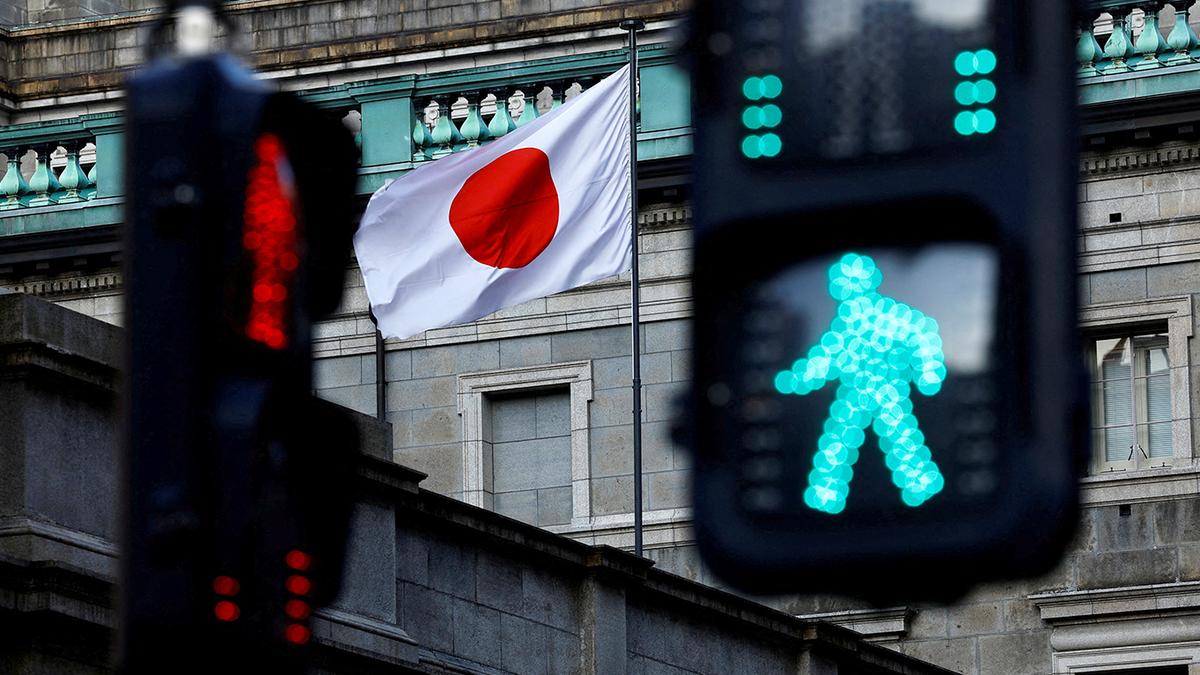
- 04 Sep 2025
In News:
Japan is set to make a significant leap in the digital finance space with the launch of a blockchain-based digital yen (DCJPY) by fiscal 2026. Announced by the Japan Post Bank—a major financial institution with significant government shareholding—this initiative marks one of the largest government-linked ventures into deposit-based digital currencies worldwide.
About DCJPY
- Nature: A blockchain-based deposit currency.
- Backing: Fully backed 1:1 by fiat yen, eliminating volatility risks common to cryptocurrencies.
- Issuer: Japan Post Bank, in collaboration with DeCurret DCP (subsidiary of Internet Initiative Japan).
- Regulation: Issued through the formal banking system, giving it more security, oversight, and credibility compared to private stablecoins.
How It Works
- Customers convert yen deposits into DCJPY tokens.
- These tokens can be used for:
- Real-time digital transactions.
- Settlement of digital securities.
- Asset tokenization and blockchain-based asset transfers.
- Entirely recorded on a blockchain ledger, ensuring traceability, transparency, and instant settlement.
Key Features
- Full Fiat Backing: Maintains stability with zero volatility.
- Blockchain-based: Offers decentralisation, improved security, and transparency.
- Instant Settlement: Removes delays of traditional bank transfers.
- Wider Usability: Designed for ordinary depositors, unlike experimental central bank digital currencies (CBDCs).
- Tokenized Deposit Currency: Positioned distinct from private stablecoins, bridging regulated banking with blockchain innovation.
Strategic Significance
- For Japan’s Financial System
- Strengthens the use of blockchain in mainstream finance.
- Supports digital securities, asset tokenization, and fintech integration.
- Enhances efficiency in payments, settlements, and cross-border transfers.
- Global Context
- Adds momentum to the digital currency race, where China has already advanced with its e-CNY (digital yuan) pilot.
- Offers a regulated alternative to volatile cryptocurrencies, addressing concerns of money laundering, volatility, and lack of oversight.
- Reflects a growing global trend of exploring CBDCs and deposit tokens to safeguard monetary sovereignty against private crypto dominance.
YudhAbhyasExercise
- 04 Sep 2025
In News:
Despite rising bilateral tariff tensions, India and the United States have commenced their largest-ever edition of the YudhAbhyas Army exercise at Fort Wainwright, Alaska. The two-week-long exercise underscores the strategic depth of the India–US defence partnership, even amid political and trade frictions.
About YudhAbhyas Exercise
- Nature: Annual bilateral military exercise between the Indian Army and the US Army.
- Initiation: Started in 2004 under the India–US Defence Cooperation Framework.
- Hosting: Conducted alternately in India and the US.
- Focus: Joint training in counter-terrorism, peacekeeping, mountain and high-altitude warfare.
2025 Edition Highlights
- Location: Fort Wainwright, Alaska — subarctic conditions comparable to Himalayan terrain.
- Indian Participation: Over 450 soldiers from the Madras Regiment.
- US Participation: Troops from the 5th Infantry Regiment “Bobcats”, Arctic Wolves Brigade Combat Team, 11th Airborne Division.
Training Features
- Joint heliborne operations.
- Surveillance and UAV deployment.
- Rock-craft and mountain warfare.
- Casualty evacuation and combat medical aid.
- Integrated use of artillery, aviation, and electronic warfare.
Strategic Significance
- Operational Readiness
- Enhances interoperability and coordination in extreme cold climates, vital for Himalayan and Arctic theatres.
- Strengthens joint capabilities in counter-terrorism, peace support, and disaster relief operations.
- Defence Cooperation Beyond Exercises
- The US has secured Indian defence deals worth over $25 billion since 2007.
- Recent major acquisitions:
- 99 GE-F404 turbofan engines (for Tejas Mk-1A fighters) worth $716 million.
- Proposed deal for 113 more engines worth $1 billion.
- 31 MQ-9B Predator drones worth $3.8 billion, deliveries expected in 2029–30.
- Geopolitical Context
- Exercises continue despite 50% tariffs imposed by the US on India under President Trump, straining economic ties.
- Defence cooperation remains resilient, reflecting two decades of strategic partnership.
- India balances ties with Russia and cautiously re-engages with China, maintaining its strategic autonomy.
- Quad Linkages
- Parallel planning is underway for the Malabar Naval Exercise among Quad nations (India, US, Japan, Australia) off Guam in November 2025, further deepening maritime security collaboration in the Indo-Pacific.
World Liberty Financial tokens ($WLFI)
- 04 Sep 2025
In News:
The launch and trading of the World Liberty Financial tokens ($WLFI), linked to the Trump family’s cryptocurrency venture, mark a significant development at the intersection of politics, finance, and technology. The tokens recently began trading on major global crypto exchanges such as Binance, OKX, and Bybit, drawing global attention due to their political association and implications for the future of decentralized finance (DeFi).
About $WLFI
- Platform: Issued under the World Liberty Financial (WLF)DeFi venture.
- Launch: Initiated in 2024 by the Trump family and business partners. Reports suggest that Donald Trump has earned over $500 million from the project.
- Structure:
- Tokens: $WLFI cryptocurrency.
- Stablecoin: Parallel issuance for transactional stability.
- Governance: Early investors received non-tradable tokens with voting rights on governance matters (e.g., code and business decisions).
Trading Features
- Exchanges: Listed on Binance, Bybit, OKX, KuCoin, MEXC, Gate.io, among others.
- Trading Mechanisms:
- Spot Trading – direct ownership and withdrawal (low entry barrier for beginners).
- Perpetual Futures – leverage-based trading, with higher risks and volatility.
- Circulation: Limited supply at launch; allocations for future release governed by investor votes.
- Investor Exit: Early investors allowed to sell up to 20% of their holdings.
- Launch Price: Approx. $0.31 per token (CoinGecko data).
Governance and Investor Role
- Investors play a governance role by voting on changes to the platform, including trading rules and code modifications.
- A July 2025 investor vote enabled tokens to become tradable, boosting both liquidity and potential value appreciation.
Significance and Implications
- Political-Crypto Nexus: The association of a former U.S. President with a cryptocurrency raises concerns of conflict of interest, especially in shaping U.S. regulatory frameworks for digital assets.
- Financial Innovation: Combines governance tokens with tradable assets, blurring lines between speculative crypto trading and participatory corporate governance.
- Investor Hype vs Utility: While the Trump brand adds political and market visibility, critics argue much of the token’s value stems from speculation and celebrity endorsement rather than technological or financial innovation.
- Crypto Market Dynamics: Listings on major exchanges enhance liquidity and visibility, while also fueling volatility and generating revenue through transaction fees.
Swarnamukhi River
- 04 Sep 2025
In News:
The Tirupati Urban Development Authority (TUDA) has launched Operation SWARNA, a comprehensive initiative aimed at rescuing, reviving, and rejuvenating the River Swarnamukhi in Andhra Pradesh. The project seeks to restore the river’s ecological flow, protect it from encroachments, and ensure its long-term sustainability. Modeled on Hyderabad’s HYDRAA (Hyderabad Drainage and River Authority for Action and Awareness) framework, the proposed task force will be headed by the TUDA Vice-Chairman and vested with enforcement powers.
About River Swarnamukhi
- Location: Andhra Pradesh; an east-flowing river with a catchment area of 3,225 sq. km.
- Origin: Rises at ~300 m elevation in the Eastern Ghats near Pakala village, Chittoor district.
- Course: Flows 130 km northeast, passing through Tirupati hills, and joins the Bay of Bengal.
- Religious Significance: Passes through Tirumala and Srikalahasti, home to temples like the Srikalahasteeswara Temple.
- Hydrology:
- Independent river system, not connected to major rivers.
- Rain-fed; highly dependent on rainfall in upper catchments.
- Rainfall varies from 1270 mm (eastern side) to 762 mm (western side) of the basin.
- Tributary: Kalyani River, across which the Kalyani Dam (1977) regulates flow.
Challenges
- Encroachment and land grabbing along the riverbanks.
- Seasonal and irregular flows due to rainfall dependency.
- Decline in water quality and ecological health from urban pressures.
- Cultural risk: Threat to temple towns and their heritage that depend on the river.
Significance of Operation SWARNA
- Ecological revival: Ensures sustainable river flow and biodiversity restoration.
- Water security: Rejuvenation can enhance groundwater recharge and local water availability.
- Cultural preservation: Protects sacred towns of Tirumala–Srikalahasti corridor.
- Model initiative: Replicates the HYDRAA framework of Hyderabad, strengthening river governance.
Air Quality Life Index
- 04 Sep 2025
In News:
Air pollution has emerged as India’s gravest public health challenge, surpassing traditional concerns like malnutrition, unsafe water, and tobacco use. The Air Quality Life Index (AQLI) 2025 Report, prepared by the Energy Policy Institute at the University of Chicago (EPIC), highlights how toxic air substantially reduces life expectancy across the country, with disproportionate impacts in the northern belt.
About Air Quality Life Index (AQLI)
- Developed by Michael Greenstone and EPIC, University of Chicago.
- Quantifies the impact of long-term exposure to PM2.5 on life expectancy.
- Combines research evidence with global particulate pollution data to estimate the loss in healthy years of life.
Key Findings of AQLI 2025 Report
National Impact
- Average life expectancy loss in India: 3.5 years.
- All 1.4 billion Indians live in areas exceeding the WHO’s safe limit of 5 µg/m³ for PM2.5.
- Comparative impact:
- Malnutrition: 1.6 years lost
- Tobacco use: 1.5 years lost
- Unsafe water & sanitation: 8.4 months lost
Regional Disparities
- Northern India is the world’s most polluted region, with 544.4 million people (38.9% of population) exposed to severe pollution.
- Delhi-NCR: Worst affected, with residents losing 8.2 years of life expectancy (WHO standards).
- By India’s weaker PM2.5 norm (40 µg/m³): 4.74 years lost.
- Other states:
- Bihar: 5.6 years lost
- Haryana: 5.3 years lost
- Uttar Pradesh: 5 years lost
South Asian Context
- South Asia remains the most polluted region globally.
- PM2.5 levels rose by 2.8% in 2023 after a brief decline in 2022.
- Regional impact:
- 3 years cut from average life expectancy.
- Over 8 years lost in most affected zones.
Standards and Gains from Pollution Reduction
- 46% of Indians live in areas exceeding even India’s own PM2.5 limit of 40 µg/m³.
- Meeting national standards could add 1.5 years to life expectancy.
- Meeting WHO standards could add up to 9.4 months even in relatively cleaner regions.
India’s First Multi-Lane Free Flow (MLFF) Tolling System
- 03 Sep 2025
In News:
In August 2025, the Indian Highways Management Company Limited (IHMCL), promoted by the National Highways Authority of India (NHAI), signed an agreement with ICICI Bank to implement India’s first Multi-Lane Free Flow (MLFF) tolling system. The pilot will be rolled out at Choryasi Fee Plaza on NH-48 in Gujarat, making it the country’s first barrier-free toll plaza, with further expansion planned across multiple locations.
What is MLFF?
- Definition: A barrier-less electronic tolling system.
- Technology Used:
- FASTag-based RFID readers.
- Automatic Number Plate Recognition (ANPR) cameras for vehicle registration verification.
- Function: Enables seamless toll deduction without vehicles halting at toll plazas.
Significance of MLFF
- Seamless travel – Eliminates queues and stoppages at toll booths.
- Reduced congestion & time-saving – Improves traffic flow on busy highways.
- Fuel efficiency & lower emissions – Supports environmental sustainability.
- Improved toll revenue collection – Reduces leakages and ensures transparency.
- Technology-driven infrastructure – Supports creation of a smart, efficient, and user-friendly National Highway network.
About NHAI
- Statutory Body: Established under the National Highways Authority of India Act, 1988; operational since 1995.
- Mandate: Development, maintenance, and management of India’s National Highways.
- Administrative control: Ministry of Road Transport and Highways (MoRTH).
- Composition:
- 1 Full-time Chairman.
- Up to 5 Full-time Members.
- 4 Part-time Members (Secretaries of Road Transport & Highways, Expenditure, Planning, and DG of Road Development).
CEREBO – Indigenous Brain Injury Diagnostic Tool
- 03 Sep 2025
In News:
Traumatic Brain Injury (TBI) is a major public health challenge in India, causing high mortality, morbidity, and long-term disability. Traditional diagnostic tools like CT and MRI scans are costly, infrastructure-intensive, and often unavailable in rural or emergency settings.
To bridge this gap, the Indian Council of Medical Research (ICMR), in collaboration with AIIMS Bhopal, NIMHANS Bengaluru, the Medical Device & Diagnostics Mission Secretariat (MDMS), and Bioscan Research, has developed CEREBO, a portable and indigenous diagnostic device.
What is CEREBO?
- Nature: A hand-held, portable, non-invasive device.
- Technology: Uses near-infrared spectroscopy integrated with machine learning.
- Function: Detects intracranial bleeding and brain edema within one minute.
- Accessibility: Designed for use by paramedics and unskilled personnel in ambulances, trauma centres, rural clinics, and disaster zones.
- Safety: Radiation-free, safe for infants and pregnant women.
- Output: Provides colour-coded, easy-to-interpret results.
Validation & Adoption
- Underwent multi-centre clinical trials at leading trauma and neurosurgical centres.
- Evaluated for diagnostic accuracy, time-to-decision benefits, and feasibility in emergency care pathways.
- Supported by ICMR-MDMS post-market surveillance confirming effectiveness in patient triage.
- Recommended for adoption in tertiary care hospitals, emergency services, and military healthcare.
Importance of CEREBO
- Addresses diagnostic gaps in rural and underserved areas.
- Enables early detection and triage, reducing fatalities and long-term complications.
- Provides a low-cost, rapid, and radiation-free alternative to CT/MRI scans.
- Potential for global adoption in emergency medicine, military operations, and disaster response.
Traumatic Brain Injury (TBI) – A Public Health Concern
- Definition: Disruption of normal brain function due to sudden trauma to the head.
- Causes in India:
- Road traffic accidents: ~60%
- Falls: 20–25%
- Violence: ~10%
- Incidence: ~1.5–2 million injuries annually; ~1 million deaths in India.
- Challenges: Mild TBIs often go undiagnosed initially, but may worsen over time.
- Consequences:
- Immediate: Loss of consciousness, seizures, dizziness, confusion.
- Complications: Intracranial bleeding, brain swelling, coma.
- Long-term: Memory loss, cognitive decline, depression, behavioural changes, and risk of neurodegenerative diseases.
UDISE+ 2024-25 Report
- 03 Sep 2025
In News:
- The Ministry of Education released the Unified District Information System for Education Plus (UDISE+) 2024–25 report, providing a comprehensive picture of India’s school education system.
- Covering Grades I–XII across government, aided, and private schools, UDISE+ maps enrolment, teacher availability, infrastructure, digital access, retention, and learning environment.
- The findings reflect both significant progress and persistent gaps in achieving the goals of the National Education Policy (NEP) 2020.
Teacher Availability and Pupil–Teacher Ratio (PTR)
- For the first time, the number of teachers crossed 1 crore (1.01 crore) in 2024–25, a 6.7% rise since 2022–23.
- PTRs improved: Foundational (10), Preparatory (13), Middle (17), and Secondary (21)—all within NEP’s benchmark (30:1).
- However, disparities remain: states like Jharkhand (47:1) and Maharashtra/Odisha (37:1) face severe shortages, especially in higher classes.
- Female teachers now constitute 54.2%, reflecting growing gender balance.
Enrolment, Dropouts, and Retention
- Dropout rates declined significantly: Preparatory (2.3%), Middle (3.5%), Secondary (8.2%).
- Retention rates improved: Foundational (98.9%), Preparatory (92.4%), Middle (82.8%), Secondary (47.2%).
- Transition rates rose across stages, with 92.2% students moving to middle level and 86.6% to secondary level.
- Gross Enrolment Ratio (GER): Middle (90.3%), Secondary (68.5%)—indicating improved access but a need for further inclusion at higher levels.
Infrastructure and Digital Divide
- Basic facilities: Electricity (93.6%), Girls’ toilets (97.3%), Boys’ toilets (96.2%), Drinking water (99.3%), Handwashing (95.9%).
- Digital readiness: Computer access in schools rose to 64.7%, internet access to 63.5%. Yet regional disparities remain:
- South Indian states (Kerala, Tamil Nadu) report near-universal coverage.
- Eastern & Northeastern states lag behind—West Bengal (18.6% internet), Meghalaya (26.4%).
- Despite progress, >25,000 schools lack electricity, and 5.1% schools run with fewer than 10 students.
- Single-teacher schools reduced by 6%, and zero-enrolment schools fell by 38%, but remain concentrated in Ladakh (32%), Arunachal Pradesh and Uttarakhand (22%).
Health and Inclusive Education
- Medical check-ups are available in only 75.5% schools, with serious gaps in Bihar (32.7%) and Nagaland (44.9%).
- Inclusive facilities: 54.9% of schools now have ramps and handrails for children with disabilities.
- Girls’ enrolment increased marginally to 48.3%, indicating gradual progress towards gender equity.
Teacher Training and Capacity Building
- 91% teachers are formally trained, but inter-state variation persists.
- Kerala and Tamil Nadu lead with near-total coverage.
- Meghalaya lags with only 72% at primary and 80% at upper-primary levels.
Significance and Challenges
- The report highlights improved teacher strength, better PTR, reduced dropouts, and rising digital access, aligning with NEP’s vision of universal foundational literacy and equitable access.
- Persistent regional disparities, lack of electricity in thousands of schools, inadequate digital penetration in the Northeast, and weak health infrastructure remain major challenges.
VrindavaniVastra
- 03 Sep 2025
In News:
The VrindavaniVastra, a 16th-century sacred silk textile of Assam, is set to return temporarily from the British Museum, London, for exhibition in 2027. The decision marks a significant milestone in India’s efforts to reclaim its cultural heritage and present it to the public in its place of origin.
Historical Background
- The VrindavaniVastra was woven in Assam under the guidance of SrimantaSankardeva, the great Vaishnav saint-reformer, at the request of Koch King Nara Narayan.
- It depicts scenes from Lord Krishna’s childhood and divine pastimes in Vrindavan, woven intricately with silk threads.
- Historically, Nara Narayan had sheltered Sankardeva after he faced persecution by the Ahom kingdom under pressure from Brahmin priests, reflecting the socio-political tensions of the time.
Artistic and Cultural Significance
- The textile is regarded as a masterpiece of Assamese Vaishnav art, blending weaving traditions with spiritual themes.
- Originally consisting of 15 separate silk panels, the current exhibit measures around 9.5 metres in length, assembled from multiple fragments.
- It represents not only religious devotion but also the syncretic weaving traditions of Assam, incorporating motifs influenced by diverse artistic cultures.
- As a central artefact of Assamese Vaishnavism, it reinforces Sankardeva’s legacy of devotional bhakti traditions.
Journey to the West
- Fragments of the Vastra were believed to have travelled from Assam to Tibet in the 17th–18th centuries, before being collected by British explorers during the 19th–20th centuries.
- In 1904, the India Museum acquired the textile and later transferred it to the British Museum. Since then, it has been part of their South Asian collection, alongside similar pieces in other European museums.
Mela Patt Festival
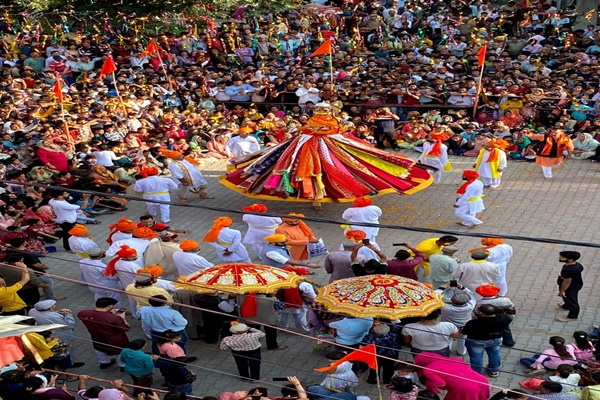
- 03 Sep 2025
In News:
The Mela Patt Festival, celebrated annually in Bhaderwah (Doda district, Jammu & Kashmir), is one of the most prominent cultural and religious events of the region. Rooted in Nag culture, the festival honors Lord Vasuki Nag, the presiding deity of Bhaderwah Valley, and reflects the valley’s rich legacy of syncretic traditions and communal harmony.
Historical Background
- The origins of the festival date back to the 16th century, when it was first celebrated by King Nag Pal during the era when Bhaderwah was known as Bhadarkashi.
- The festival commemorates the historic meeting between Mughal Emperor Akbar and King Nag Pal of Bhaderwah, highlighting its integration into broader Indian history.
- Over the centuries, the event has remained a symbol of unity, with no reported communal discord in its nearly 600-year-long history.
Rituals and Celebrations
- Timing: The festival is observed on Nag Panchami, seven days after the conclusion of the sacred Kailash Yatra.
- Cultural Expressions:
- The unique ‘Dikko Dance’ features participation from men and women across communities, symbolizing peace and pride.
- The ‘Dhakku Dance’, a traditional Dogra folk performance, is also showcased, underscoring its importance in the cultural mosaic of India.
- Inclusivity: Devotees and visitors from across Jammu & Kashmir, irrespective of caste or religion, gather to pay homage to Raja Nag Pal’s bravery and spiritual power.
Ethanol Blending in India
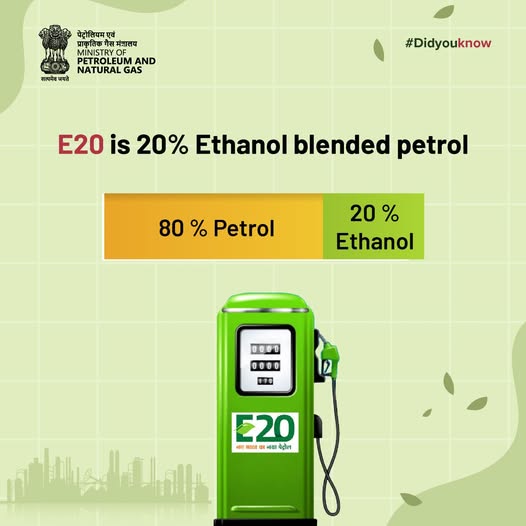
- 02 Sep 2025
In News:
India has been steadily advancing towards ethanol blending in petrol to reduce dependence on fossil fuels, cut carbon emissions, and boost the agricultural economy. Recently, debates have intensified after the nationwide rollout of E20 fuel (20% ethanol + 80% petrol) in July 2025—five years ahead of its initial 2030 target. Concerns were raised about its impact on older vehicles and consumer safety.
What is Ethanol Blending?
- Ethanol (C?H?OH): A renewable, biodegradable, and clean-burning fuel derived from biomass such as sugarcane molasses, rice, maize, barley, and wheat.
- Ethanol Blending: Mixing ethanol with petrol to increase oxygen content, leading to cleaner combustion, reduced greenhouse gas emissions, and lower crude oil imports.
- India’s Ethanol Blended Petrol (EBP) Programme began in 2003.
- Progress:
- 10% blending target achieved in 2021-22
- 12.06% in 2022-23
- 14.06% in 2023-24
- 20% blending achieved in July 2025, ahead of the 2030 deadline.
E20 Fuel and Automobile Industry Response
- E20 fuel is now being offered at petrol pumps, replacing earlier E5/E10 options.
- The Society of Indian Automobile Manufacturers (SIAM) confirmed that warranties will remain valid for older cars even if they were not originally designed for E20.
- Automakers are issuing dealer advisories on E20 usage in pre-2023 vehicles, when flex-fuel-compatible models began rolling out.
- The government has also announced guidelines for 27% ethanol blending, further deepening the transition.
Concerns and Challenges
- Fuel Efficiency & Engine Issues: Some vehicle owners have reported lower mileage and performance issues with E20.
- Warranty and Consumer Trust: Initial confusion over automaker responsibility raised fears of invalidated warranties.
- Agricultural Dependence: Heavy reliance on sugarcane and food crops raises concerns about the food vs. fuel debate and water stress.
- Supply Chain & Technology: Ethanol storage, transport, and blending infrastructure must scale up nationwide.
- Legal Challenge: A public interest litigation (PIL) on the impact of E20 is pending before the Supreme Court.
Benefits of Ethanol Blending
- Environmental: Cuts CO? emissions, improves urban air quality, and reduces vehicular pollution.
- Economic: Reduces crude oil imports (India imports ~85% of crude requirements), saving forex reserves.
- Agricultural: Provides a stable market for farmers through ethanol demand from crops like sugarcane, maize, and rice.
- Strategic: Contributes to India’s energy security and climate commitments under Paris Agreement & Net Zero 2070 goals.
Government Push and Future Roadmap
- Union Minister Nitin Gadkari has reiterated that higher ethanol blending is central to India’s green mobility transition.
- India is also exploring flex-fuel vehicles and second-generation (2G) ethanol derived from agricultural residues to address food security concerns.
- Targets:
- 27% blending roadmap under preparation.
- Expansion of ethanol production capacity through distilleries and 2G ethanol plants.
- Incentives for biofuel research, hybrid engines, and flex-fuel adoption.
Samudrayaan Project
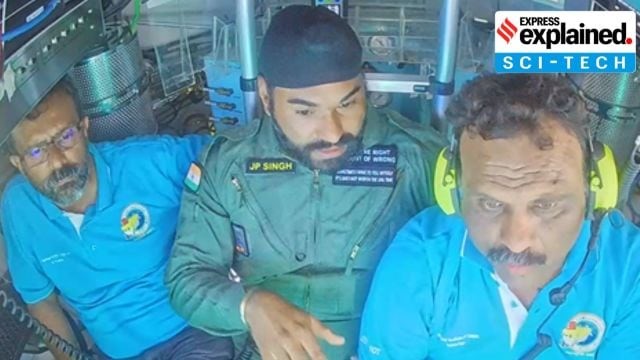
- 02 Sep 2025
In News:
India is set to join a select group of nations—US, Russia, China, Japan, and France—with the capability for manned deep-sea exploration through its ambitious Samudrayaan Project.
As part of preparations, two Indian aquanauts recently dived into the Atlantic Ocean aboard France’s submersible Nautile, gaining critical experiential insights.
The mission is a core component of the Deep Ocean Mission (2021–26), which supports India’s Blue Economy vision and aligns with the UN Decade of Ocean Science for Sustainable Development (2021–30).
Samudrayaan Project
- Objective: To send three humans in a manned submersible to a depth of 6,000 metres by 2027.
- Coordinating agency:National Institute of Ocean Technology (NIOT) under the Ministry of Earth Sciences (MoES), with technical support from ISRO’s Vikram Sarabhai Space Centre (VSSC).
- Budget: Part of the ?4,077 crore Deep Ocean Mission, approved by the Union Cabinet in 2021.
Key Aims
- Develop deep-sea mining technologies, robotics, and underwater vehicles.
- Conduct surveys for mineral deposits, particularly polymetallic nodules (rich in nickel, cobalt, manganese, rare earths).
- Explore deep-sea biodiversity and promote bio-prospecting.
- Establish an ocean climate change advisory service.
- Develop technologies for energy and freshwater from oceans.
- Build an advanced marine station for ocean biology and engineering.
Matsya-6000: The Crewed Submersible
- India’s first self-propelled manned submersible, designed like a fish.
- Built with a titanium alloy sphere (2.1 m diameter, 80 mm thickness) to withstand 600 times atmospheric pressure at 6,000 m depth and temperatures as low as -3°C.
- Capacity: 3 aquanauts for 12-hour missions, extendable to 96 hours in emergencies.
- Equipped with:
- Life-support systems (oxygen supply, CO? scrubbers, re-breather systems).
- Acoustic communication systems (since radio waves cannot penetrate deep water).
- Drop-weight escape mechanism for emergency ascent.
- Li-Po batteries and bio-vests for crew health monitoring.
Challenges in Deep-Sea Exploration
- Extreme Pressure: Precise fabrication (via electron beam welding) is required, as even a 0.2 mm deviation in sphere thickness can lead to collapse.
- Material Constraints: Titanium alloy of required grade is rare, and countries are reluctant to share reserves.
- Life Support: Ensuring safe oxygen levels, CO? absorption, and emergency backup systems.
- Communication: Acoustic telephones must overcome issues of temperature, salinity, and water depth.
- Human Endurance: Aquanauts face restricted mobility, limited nutrition, and confined conditions during 9–12 hour dives.
Deep Ocean Mission (DOM)
- Launched in 2021 for 5 years.
- Components:
- Deep Sea Mining & Manned Submersible: Samudrayaan and mineral exploration.
- Ocean Climate Change Advisory Services: Seasonal to decadal forecasting.
- Deep-Sea Biodiversity Studies: Exploration of flora, fauna, microbes.
- Deep Ocean Surveys: Mapping multi-metal sulphide and PMN sites.
- Energy & Freshwater: Research into Ocean Thermal Energy Conversion (OTEC) and desalination.
- Advanced Marine Station: Capacity building, R&D, and technology incubation.
Recent Progress
- Ocean Mineral Explorer (OMe 6000): Autonomous underwater vehicle deployed in 2022, surveying 14 sq. km in the Central Indian Ocean Basin at depths of 5,271 m, assessing PMN deposits and biodiversity.
- Research vessel SagarNidhi used for exploration and surveys.
Strategic and Economic Significance
- Blue Economy Growth: Supports industries like shipping, fishing, tourism, and biotechnology.
- Resource Security: Access to polymetallic nodules critical for electronics, renewable energy, and defense sectors.
- Geostrategic Edge: Enhances India’s role in the International Seabed Authority (ISA) regime.
- Scientific Advancement: Builds indigenous expertise in ocean engineering and extreme-environment technologies.
- Climate Preparedness: Generates critical data on ocean-climate interactions.
International Centre for Integrated Mountain Development
- 02 Sep 2025
In News:
The Hindu Kush Himalaya (HKH), spanning about 3,500 km across eight countries—Afghanistan, Bangladesh, Bhutan, China, India, Myanmar, Nepal, and Pakistan—is a global ecological and hydrological powerhouse.
Often termed the “Third Pole”, it holds the largest area of permanent ice cover outside the Arctic and Antarctic, feeding 10 major Asian river systems including the Indus, Ganga, and Brahmaputra. Despite its significance, a new report by the International Centre for Integrated Mountain Development (ICIMOD) warns that the region is tapping only 6.1% of its vast renewable energy potential, exposing vulnerabilities in the face of climate change.
About ICIMOD
- Established in 1983, headquartered in Kathmandu, Nepal.
- Intergovernmental body representing eight member countries of the HKH.
- Mission: Build and share knowledge to drive regional policy, investments, and climate-resilient development.
- Functions:
- Knowledge generation and sharing.
- Bridging science, policy, and practice.
- Providing a regional platform for sustainable mountain development.
Renewable Energy Potential in HKH
- Total hydropower potential: 882 GW.
- Of this, 635 GW lies in the trans-boundary rivers of HKH.
- Only 49% of hydropower potential is currently harnessed.
- Non-hydro potential: Nearly 3 Terawatts (solar & wind).
- Combined renewable energy potential in the region: >3.5 Terawatts.
- Current share in Total Primary Energy Supply (TPES): just 6.1%.
Country-wise Renewable Scenario
- Bhutan & Nepal: Generate 100% of electricity from renewables.
- India: Renewables contribute 23% of electricity generation.
- Others: Reliance on fossil fuels remains very high (Bangladesh 98%, Pakistan 76%, China 67%, Myanmar 51%).
- Traditional biomass use: Alarmingly high in rural areas—two-thirds of Nepal’s TPES, half of Myanmar’s, one-fourth of Bhutan’s and Pakistan’s—leading to severe air quality and health issues.
Climate Change & Energy Risks
The report highlights that climate variability is destabilising energy systems:
- Increased water variability and changing hydrological regimes reduce hydropower reliability.
- Glacial Lake Outburst Floods (GLOFs) and extreme weather events threaten nearly two-thirds of existing and planned hydropower projects.
- Infrastructure damage due to landslides, floods, and mega-floods is rising.
Policy Recommendations
- Integrate disaster risk reduction into hydropower and renewable energy projects.
- Explore “dams equivalents” like:
- Climate-resilient irrigation systems.
- On-farm water-efficient practices.
- Urban water storage solutions.
- Scaling up solar and wind power.
- Promote regional cooperation through platforms like SAARC Energy Centre and BIMSTEC Energy Ministers’ Conference.
- Attract international finance and private investment to overcome capital constraints.
- Encourage south-south collaboration, technology exchange, and joint research.
Significance for India
- India, a major HKH country, has both high renewable potential and high fossil fuel dependence.
- Regional clean energy cooperation can:
- Enhance energy security.
- Reduce import dependence.
- Create green jobs.
- Help achieve India’s Nationally Determined Contributions (NDCs) under the Paris Agreement.
MY Bharat Aapda Mitras
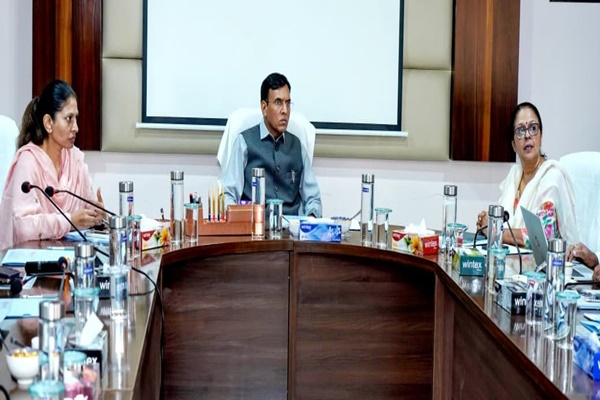
- 02 Sep 2025
In News:
- In the wake of devastating floods in Punjab and Himachal Pradesh, the Union Minister of Sports and Youth Affairs, Dr. Mansukh Mandaviya, announced the deployment of over a thousand trained MY Bharat Aapda Mitras to aid ongoing rescue and relief efforts.
- The initiative underscores the government’s emphasis on community-based disaster response, leveraging trained youth volunteers to strengthen resilience at the grassroots level.
MY Bharat: An Overview
- MY Bharat is an autonomous body established by the Department of Youth Affairs, Ministry of Youth Affairs and Sports.
- It operates as a phygital (physical + digital) platform, connecting and mobilising India’s youth (aged 15–29 years) through volunteering, mentorship, experiential learning, and industry networks.
- The platform seeks to provide equitable access to opportunities, enabling youth to contribute to Viksit Bharat (Developed India).
Aapda Mitra Programme under MY Bharat
- The Aapda Mitra programme, implemented by the National Disaster Management Authority (NDMA), provides structured, NDMA-certified disaster response training to youth volunteers.
- Training modules cover:
- Search and rescue operations
- First aid and medical response
- Crowd management
- Emergency coordination
- These volunteers act as first responders, ensuring the timely supply of food, medicines, and relief material to communities cut off by floods, landslides, or cloudbursts.
Current Mobilisation for Punjab and Himachal Pradesh
- Thousands of Aapda Mitras are being deployed across the flood-hit districts of Punjab and Himachal Pradesh.
- Volunteers will work in coordination with District Magistrates, district administrations, and local authorities to ensure swift rescue and relief.
- Their role will be crucial in reaching remote villages, where connectivity has been disrupted due to floods and landslides.
Significance
- Strengthens community-led disaster resilience.
- Bridges the gap between formal institutions (NDMA, administration) and citizen response efforts.
- Provides a youth-centric model of disaster preparedness, integrating skill development with national service.
- Demonstrates the whole-of-society approach to disaster management by combining government resources, institutional training, and grassroots volunteerism.
Mission Mausam
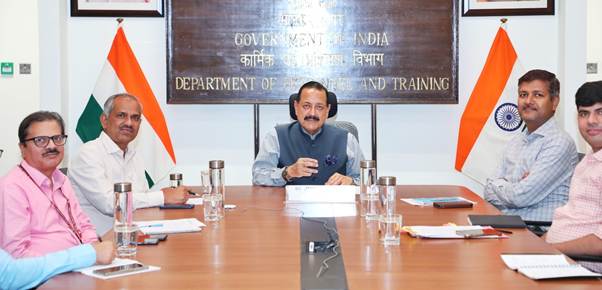
- 02 Sep 2025
In News:
The increasing frequency of extreme weather events—cloudbursts, flash floods, and landslides—has underlined the urgent need for robust forecasting and disaster management mechanisms in India’s Himalayan region.
In this context, the Indian Meteorological Department (IMD), under the Ministry of Earth Sciences (MoES), is set to install four additional radars in Jammu & Kashmir (J&K) as part of Mission Mausam (2024). This development coincides with intensified relief and rehabilitation efforts following unprecedented rainfall and floods in August–September 2025.
Mission Mausam: An Overview
- Launched: 2024 by the Ministry of Earth Sciences.
- Implementing Agencies: IMD, National Centre for Medium-Range Weather Forecasting (NCMRWF), and Indian Institute of Tropical Meteorology (IITM).
- Objectives:
- Enhance India’s forecasting capability across short, medium, extended, and seasonal scales.
- Develop high-resolution models for improved accuracy in monsoon prediction.
- Strengthen observational networks with radars, satellites, automated weather stations.
- Provide sector-specific advisories for agriculture, water resources, health, energy, and disaster management.
- Build capacity through national and international collaborations.
Significance: It represents a transformative milestone in India’s climate resilience strategy, supporting sustainable development, while safeguarding lives, livelihoods, and infrastructure.
Relief and Rehabilitation Measures in J&K (2025)
Following the cloudbursts and floods, the Centre and UT administration launched coordinated relief measures:
- Immediate Relief: Supply of rations, medicines, water filters, and medical kits. Additional consignments dispatched from MP funds to supplement government aid.
- Community Role: Civil society and local bikers acted as first responders, showcasing a whole-of-society approach.
Broader Relevance for Disaster Management
- Policy Linkages: Aligned with the Disaster Management Act, 2005 and the Sendai Framework (2015–2030), emphasizing early warning systems and community resilience.
- Socio-Economic Impact: Strengthening forecasting reduces agricultural losses, protects infrastructure, and prevents human casualties.
- Strategic Significance: Enhances preparedness in the fragile Himalayan ecosystem, prone to climate-induced disasters.
India Develops Rare Reference Material for Enhanced Anti-Doping Testing

- 01 Sep 2025
In News:
- In a landmark achievement, India has successfully developed a rare and high-purity Reference Material (RM) – Methandienone Long-Term Metabolite (LTM) for advanced anti-doping testing in sports.
- This development was led by the National Institute of Pharmaceutical Education and Research (NIPER), Guwahati in collaboration with the National Dope Testing Laboratory (NDTL), New Delhi, under the Department of Pharmaceuticals.
What are Reference Materials (RMs)?
- Highly purified, scientifically characterized forms of drug substances or their metabolites.
- Essential for accurate analytical testing and doping control.
- Crucial for detecting over 450 prohibited substances listed by the World Anti-Doping Agency (WADA).
- Globally scarce – only 4–5 manufacturers worldwide produce such materials, making them expensive and difficult to access.
Methandienone Long-Term Metabolite (LTM)
- A specialized RM developed for tracing misuse of anabolic steroid Methandienone.
- LTMs are metabolites that remain detectable in urine long after substance use – enabling identification of athletes even months or years after doping.
- Enhances detection sensitivity and increases the number of positive tests, thus acting as a deterrent.
- Not commercially available globally, making India’s contribution unique.
Significance for India and the World
- Strengthening Anti-Doping Efforts: Supports WADA’s global mission of transparency, fairness, and integrity in sports.
- Protecting Clean Athletes: Shields honest athletes while discouraging performance-enhancing drug misuse.
- Global Contribution: Methandienone LTM can be shared with 30 WADA-accredited laboratories worldwide, positioning India as a global leader in doping science.
- Self-Reliance in Sports Science: Since 2020, NIPER Guwahati has synthesized 12 out of 22 identified RMs for NDTL, reducing dependency on costly imports.
National Dope Testing Laboratory (NDTL) – Key Facts
- Premier analytical testing and research organization under Government of India.
- Only laboratory in India accredited for human sports dope testing.
- Accredited by:
- National Accreditation Board for Testing & Calibration Laboratories (NABL)
- World Anti-Doping Agency (WADA)
- Plays a central role in ensuring India’s compliance with international anti-doping standards.
Strait of Malacca
- 01 Sep 2025
In News:
India and Singapore have recently elevated their Comprehensive Strategic Partnership (CSP) by signing multiple agreements across defence, space, trade, skills, and sustainability.
A key highlight was Singapore’s support for India’s interest in joint patrolling of the Malacca Strait, one of the world’s most critical maritime chokepoints. This development has both bilateral and regional strategic implications.
The Malacca Strait: Geography and Importance
- Location: Between Sumatra (Indonesia) and Peninsular Malaysia–Thailand, linking the Andaman Sea (Indian Ocean) with the South China Sea (Pacific Ocean).
- Significance:
- One of the busiest shipping lanes globally, handling ~60% of India’s seaborne trade and nearly all its LNG imports.
- A vital energy artery for China, making it a strategic vulnerability (“Malacca Dilemma”).
- Historically named after the Malacca Sultanate (1400–1511).
Malacca Straits Patrols (MSP)
- Launched in 2004 by Indonesia, Malaysia, and Singapore; Thailand joined later.
- Aimed at curbing piracy, terrorism, and trafficking.
- Three coordinated layers:
- Sea Patrols: Regular joint naval patrolling.
- Eyes-in-the-Sky: Combined aerial surveillance.
- Intelligence Exchange Group: Real-time information sharing.
- India’s interest in joining the MSP reflects its commitment to freedom of navigation, regional stability, and maritime security.
India–Singapore Bilateral Cooperation (2025 Roadmap)
During PM Narendra Modi’s meeting with Singapore PM Lawrence Wong (2025), a roadmap was adopted identifying eight priority areas:
- Trade and Economy
- Skills Development – MoU to establish a National Centre of Excellence for Advanced Manufacturing Skilling in Chennai.
- Digitalisation& AI
- Sustainability – MoU for a Green and Digital Shipping Corridor and collaboration on green maritime fuel.
- Connectivity– Deepening maritime links.
- Healthcare & Medicine
- People-to-People and Cultural Exchanges
- Defence and Security – including space collaboration.
Key Agreements
- Space Cooperation: MoU between IN-SPACe (India) and Singapore’s Office for Space Technology and Industry for commercial and research linkages.
- Green Shipping Corridor: To promote sustainable maritime trade.
- Skill Development: Centre of Excellence for advanced manufacturing skilling.
Strategic Implications
- For India:
- Securing energy and trade routes through the Strait.
- Expanding its role in regional security architecture.
- Strengthening defence and space cooperation with ASEAN.
- For Singapore:
- Reinforces its position as a hub for maritime and digital connectivity.
- Gains from India’s manufacturing, space, and green energy initiatives.
- Regional Balance:
- Counters China’s strategic dominance in the South China Sea.
- Enhances multilateral security frameworks in the Indo-Pacific.
Vaquita Porpoise
- 01 Sep 2025
In News:
- The vaquita porpoise (Phocoena sinus), the world’s rarest marine mammal, is on the brink of extinction with only about 10 individuals remaining in the northern Gulf of California (Sea of Cortez), Mexico.
- Despite global attention, weak enforcement of wildlife protection laws in Mexico and the persistence of illegal fishing practices have accelerated the species’ decline.
- A recent report by the North American Environmental Commission under the United States-Mexico-Canada Agreement (USMCA) has held Mexico accountable for failing to safeguard the vaquita.
The Vaquita: An Overview
- Discovery: Identified in 1958.
- Classification: Smallest member of the cetacean family (whales, dolphins, porpoises), diverged from dolphins ~15 million years ago.
- Habitat: Restricted to shallow waters (up to 50 m deep) in the Upper Gulf of California.
- Appearance: Distinct dark eye rings, lip patches, and a large dorsal fin aiding heat release.
- Behavior: Solitary or small-group species, shy, avoids boats.
- Status:
- IUCN Red List: Critically Endangered.
- CITES: Appendix I (strict trade regulation).
Causes of Decline
- Gillnet Bycatch:
- The primary threat is entanglement in illegal gillnets set for totoaba fish, whose swim bladder fetches high prices in East Asia.
- Despite Mexico’s ban on gillnets since 2020, on-ground reports reveal continued use.
- Weak Enforcement:
- Only 10 of the 850 promised satellite trackers fitted on fishing vessels.
- Fishermen bypass restrictions by sending illegal catch to other regions.
- Institutional Failures:
- Lack of adequate vessel inspections, monitoring, and promotion of alternative fishing gear.
- Mexico’s enforcement claims contradicted by eyewitness accounts and NGO reports.
International Pressure and USMCA Mechanisms
- The USMCA Environmental Commission report has urged the United States to hold Mexico accountable.
- Under USMCA, the US can:
- Press for stricter compliance through consultations.
- Escalate disputes to a panel stage.
- Impose import penalties if Mexico fails to enforce the ban in vaquita habitats.
Global AI Governance
- 01 Sep 2025
In News:
Artificial Intelligence (AI) is reshaping economies, governance, and societies at an unprecedented pace. While AI offers transformative opportunities in healthcare, education, mobility, and governance, it also poses challenges of bias, misinformation, data privacy, and ethical use. Recognizing the urgency of global cooperation, the United Nations General Assembly (UNGA) has launched two institutional mechanisms to advance inclusive and responsible AI governance.
UNGA’s Two New Initiatives on AI Governance (2025)
- Independent International Scientific Panel on AI
- Serves as a bridge between research and policymaking.
- Provides independent scientific assessments of emerging AI risks and opportunities.
- Annual reports to be presented at the Global Dialogue sessions in 2026 (Geneva) and 2027 (New York).
- Global Dialogue on AI Governance
- An inclusive UN platform for member states and stakeholders.
- Facilitates deliberation on critical AI issues: ethical use, regulation, global standards, and equitable access.
- Complements the Global Digital Compact, adopted as part of the Pact for the Future (2024).
India’s AI Governance Landscape
- Legal Framework:
- No dedicated AI law. AI is currently governed under:
- IT Act, 2000 – cybercrimes, intermediary liability.
- Digital Personal Data Protection Act, 2023 – data privacy.
- IPR laws – regulation of AI-generated works.
- No dedicated AI law. AI is currently governed under:
- Policy Initiatives:
- NITI Aayog’s National Strategy on AI (2018): Focus on healthcare, agriculture, education, mobility, smart cities.
- Principles for Responsible AI (2021): Emphasize safety, transparency, fairness, accountability, and inclusivity.
- Global Engagement:
- Hosted the GPAI Summit (2023).
- Co-chaired the AI Action Summit with France (2025).
- Set to host the AI Impact Summit (2026).
- Actively shaping norms of ethical AI use in the Global South.
PM SVANidhi 2.0
- 01 Sep 2025
In News:
The Prime Minister Street Vendor’s AtmaNirbhar Nidhi (PM SVANidhi) Scheme, launched on 1st June 2020 amidst the COVID-19 crisis, has emerged as a landmark initiative for supporting urban street vendors by providing collateral-free working capital loans, promoting digital inclusion, and enabling social security access.
In August 2025, the Union Cabinet approved the restructuring and extension of the scheme till 31st March 2030, with an enhanced outlay of ?7,332 crore to benefit 1.15 crore beneficiaries, including 50 lakh new entrants.
Key Features of the Restructured Scheme
- Enhanced Loan Tranches
- 1st tranche: ?15,000 (earlier ?10,000)
- 2nd tranche: ?25,000 (earlier ?20,000)
- 3rd tranche: ?50,000 (unchanged)
- UPI-linked RuPay Credit Card
- Available for vendors who have repaid the second loan.
- Ensures instant credit access for business and personal needs.
- Digital Incentives
- Cashback up to ?1,600 on digital transactions.
- Promotes financial literacy and digital adoption.
- Expanded Coverage
- From statutory towns to census towns, peri-urban areas, in a phased manner.
- Capacity Building & Convergence
- Training in entrepreneurship, financial literacy, and digital skills.
- Food safety & hygiene certification for street food vendors in partnership with FSSAI.
‘SVANidhi se Samriddhi’ Component
- Ensures saturation coverage of welfare schemes for vendors’ families.
- Monthly Lok Kalyan Melas to connect beneficiaries with schemes like PM Suraksha Bima Yojana, PM Jeevan Jyoti Bima Yojana, Ayushman Bharat, and PM Jan Dhan Yojana.
Achievements Till Date (as of July 2025)
- 96 lakh loans disbursed worth ?13,797 crore to 68 lakh vendors.
- 47 lakh digitally active beneficiaries with over 557 crore transactions worth ?6.09 lakh crore.
- ?241 crore cashback earned by vendors.
- 46 lakh beneficiaries profiled across 3,564 ULBs, leading to 1.38 crore scheme sanctions.
- Recognitions:
- PM’s Award for Excellence in Public Administration (2023) for Innovation.
- Silver Award (2022) for Government Process Re-engineering in Digital Transformation.
Grid Connected Rooftop Solar Scheme

- 31 Aug 2025
In News:
The Grid Connected Rooftop Solar Scheme was launched by the Government of India to promote clean energy, reduce dependence on fossil fuels such as coal and petroleum, and control pollution. By harnessing solar power through rooftop installations, the scheme provides households, institutions, and commercial entities with access to low-cost, sustainable electricity, while contributing to India’s climate goals.
Solar Rooftop System
- Definition: Installation of solar photovoltaic (SPV) panels on rooftops of residential, commercial, industrial, and institutional buildings.
- Types:
- With Battery Storage – Stores excess solar energy for later use.
- Grid Connected (SPV System) – Converts DC power from solar panels into AC power, which is used for captive consumption and surplus energy is fed into the grid. During low solar generation, the grid compensates for the shortfall.
Objectives of the Programme
- Achieve 40,000 MW capacity by 2022 (target set under the National Solar Mission).
- Central government allocation: ?11,814 crore.
- Phase II incentives:
- Up to 40% subsidy for systems up to 3 kW.
- 20% subsidy for systems between 3–10 kW.
- Increase the role of Distribution Companies (DISCOMs) in promotion and implementation.
Advantages of Grid-Connected Rooftop Solar
- Economic:
- Reduces consumer electricity bills.
- No additional land requirement as panels are roof-mounted.
- Short gestation period compared to large-scale power projects.
- Technical:
- Minimises transmission and distribution losses.
- Reduces congestion and improves voltage at tail ends of distribution lines.
- Environmental:
- Cuts carbon emissions.
- Strengthens long-term energy and environmental security.
Implementation & Nodal Ministry
- Implemented by the Ministry of New and Renewable Energy (MNRE).
- MNRE promotes research, innovation, and global collaboration in renewable energy sectors (solar, wind, hydropower, and biogas).
- Broader goals include:
- Increasing renewable energy share in India’s energy mix.
- Reducing dependence on oil-based energy.
- Supporting clean cooking, heating, and energy equity across regions.
Sundarbans Tiger Reserve
- 31 Aug 2025
In News:
The Sundarbans Tiger Reserve (STR) in West Bengal has become India’s second-largest tiger reserve after the National Board for Wildlife (NBWL) approved the state government’s proposal to expand its area by 1,044.68 sq km. With this addition, STR now spans 3,629.57 sq km, moving up from the seventh to the second position among the country’s 58 tiger reserves, next only to Andhra Pradesh’s Nagarjunasagar-Srisailam Tiger Reserve (3,727.82 sq km).
Expansion Details
- The newly added area includes three tiger-bearing forest ranges of South 24 Parganas district: Matla, Raidighi, and Ramganga.
- The expansion brings all tiger-bearing mangrove forests under the unified management of STR, ensuring uniform application of National Tiger Conservation Authority (NTCA) guidelines.
- The proposal was first conceived nearly two decades ago, revived in 2022–23, and formally cleared by NBWL in August 2025 after approvals from the State Wildlife Board and NTCA.
Location and Ecological Importance
- STR is located in the coastal districts of West Bengal, at the southernmost tip of the Gangetic delta, bordering the Bay of Bengal.
- It is part of the world’s largest delta, formed by the Ganga and Brahmaputra rivers.
- STR is unique as it is the only mangrove habitat in the world (shared with Bangladesh) that supports a significant tiger population.
- It also holds the status of a National Park and a Biosphere Reserve.
Boundaries
- East: International boundary with Bangladesh (rivers Harinbhanga, Raimangal, Kalindi).
- South: Bay of Bengal.
- West: River Matla (boundary with South 24-Parganas Forest Division).
- North-West: Rivers Bidya and Gomdi.
Biodiversity
- Flora: True mangroves, mangrove associates, halophytic herbs, shrubs, weeds, epiphytes, and parasitic plants.
- Fauna: Bengal tiger, estuarine crocodile, fishing cat, Gangetic and Irrawaddy dolphins, king cobra, water monitor lizard, and numerous bird and fish species.
Conservation and Development Implications
- Estimated tiger population: ~101 (80 within STR, 21 in adjoining forests). The number is expected to increase with better management.
- Expansion is expected to enhance:
- Central funding for tiger conservation.
- Tourism potential and local economic benefits.
- Infrastructure and staff capacity within the reserve.
- Conservationists welcome the move as long overdue, while some forest officials caution about manpower shortages (currently only 40% of sanctioned strength).
Support for Marginalized Individual for Livelihood and Enterprise (SMILE) Scheme

- 31 Aug 2025
In News:
The Government of India has undertaken multiple initiatives for the welfare and empowerment of marginalized groups, including the transgender community. A significant step in this direction is the launch of a 15-day Entrepreneurship Development Programme (EDP) under the Support for Marginalized Individual for Livelihood and Enterprise (SMILE) scheme.
About the Programme
- Inaugurated at Garima Greh, a shelter home for transgender persons in Delhi.
- Organized by the Department of Social Justice & Empowerment (DoSJE) and implemented by the National Institute of Entrepreneurship and Small Business Development (NIESBUD).
- Initially, 25 transgender candidates will be trained, with a target of 18 programmes nationwide on a pilot basis, benefitting around 1800 persons.
- Training includes:
- Business opportunity identification and market survey
- Knowledge of the entrepreneurship ecosystem
- Financial aid support schemes and banking procedures
- Entrepreneurial accounting, taxation, and regulatory compliances
- Exposure visits (e.g., incubation centres of NSIC)
- Trainees will prepare business plans and be linked with banks for financial support. Post-training, 6 months of handholding support will ensure sustainability of enterprises.
Financial Inclusion Measures
On the request of DoSJE, the Reserve Bank of India (RBI) has included the transgender community in the Priority Sector Lending (PSL) category. This ensures easier access to credit and financial services for entrepreneurial ventures.
The SMILE Scheme – Key Features
The SMILE scheme is a Central Sector Scheme implemented by the Ministry of Social Justice & Empowerment. It has two components:
- Comprehensive Rehabilitation for Welfare of Transgender Persons
- Comprehensive Rehabilitation of Persons Engaged in Begging
Provisions under SMILE
- Education: Scholarships for transgender students (Class IX to Post-Graduation).
- Skill Development & Livelihood: Training support under PM-DAKSH.
- Healthcare: Composite medical support through convergence with PM-JAY, including gender-reaffirmation surgeries in selected hospitals.
- Housing: Garima Greh shelters providing food, clothing, skill training, recreational and medical support.
- Protection & Legal Support: Establishment of Transgender Protection Cells in each state for timely investigation and prosecution of offences.
- Information Support: National Portal & Helpline for grievance redressal and information dissemination.
Significance
- Promotes economic empowerment and self-reliance of transgender persons.
- Ensures financial inclusion through PSL categorization.
- Strengthens India’s commitment towards an inclusive “Viksit Bharat” by addressing social and economic vulnerabilities of marginalized groups.
Drake Passage
- 31 Aug 2025
In News:
A powerful earthquake of magnitude 7.5 struck the Drake Passage, the stretch of ocean between South America’s Cape Horn and the South Shetland Islands of Antarctica.
About Drake Passage
- Location: Lies between Cape Horn (South America) and the South Shetland Islands (Antarctica).
- Geography: A deep and wide waterway connecting the southwestern Atlantic and southeastern Pacific Oceans; also the narrowest stretch of the Southern Ocean, spanning nearly 800 km between South America and the West Antarctic Peninsula.
- Climatic Role: Marks a climatic transition zone, separating the cool, humid subpolar conditions of Tierra del Fuego from the frigid polar climate of Antarctica.
- Navigation: Considered among the roughest seas in the world due to the collision of cold southern currents and warmer northern waters, which create strong eddies, compounded by powerful westerly winds around Cape Horn.
- Historical Importance: Before the opening of the Panama Canal, it served as a vital maritime trade route in the 19th and early 20th centuries.
- Naming: The passage is named after Sir Francis Drake, the first Englishman to circumnavigate the globe.
Lipulekh Pass

- 31 Aug 2025
In News:
India has rejected Nepal’s claims over Lipulekh Pass after the resumption of India–China trade through this border point. The issue has once again brought the strategic and political importance of the pass into focus.
Location & Geography
- Situated in the Kumaon region of Uttarakhand, near the trijunction of India, Nepal, and China.
- Altitude: ~5,334 metres (17,500 feet).
- Serves as a gateway to the higher Himalayan ranges and the Tibet Autonomous Region of China.
Historical & Trade Importance
- A traditional trade route connecting India with Tibet for centuries.
- In 1992, Lipulekh became the first Indian border post opened for official trade with China.
- Later followed by Shipki La (Himachal Pradesh, 1994) and Nathu La (Sikkim, 2006).
Religious Significance
- Forms an integral part of the Kailash Mansarovar Yatra, an important Hindu pilgrimage route to Mount Kailash and Lake Mansarovar in Tibet.
Strategic Significance
- Its geopolitical location near the trijunction makes it strategically vital for India’s border security and connectivity with Tibet.
- The dispute with Nepal underscores its sensitive nature in regional geopolitics.
Blue Carbon

- 30 Aug 2025
In News:
Seaweed farming has emerged as a potential Blue Carbon strategy, yet empirical estimates of carbon burial from such farms remain lacking in the literature.
What is Blue Carbon?
- Blue Carbon refers to organic carbon captured and stored by ocean-based vegetated ecosystems such as mangroves, saltmarshes, and seagrass meadows.
- The term “blue” highlights its association with aquatic ecosystems.
- Most blue carbon comes from carbon dioxide dissolved directly into the ocean. Smaller amounts are stored in:
- Underwater sediments and soils
- Coastal vegetation
- Organic molecules (DNA, proteins, etc.)
- Marine organisms (phytoplankton, whales, etc.)
- Despite covering just 2% of the ocean surface, these ecosystems account for 50% of total oceanic carbon absorption, making them vital in global climate mitigation efforts.
Seaweed Farming as a Blue Carbon Strategy
- Emerging Role: Seaweed cultivation has been identified as a potential Blue Carbon pathway, though empirical evidence of its carbon burial capacity has been limited until recently.
- Global Study: An analysis of 20 seaweed farms worldwide, aged between 2 and 300 years and ranging from 1 to 15,000 hectares, provides new insights.
- Findings:
- Sediment organic carbon stocks increased with farm age, reaching 140 tC ha?¹ in the oldest farm.
- Average burial rates: 1.87 ± 0.73 tCO?e ha?¹ yr?¹ in farm sediments, nearly double that of nearby reference sediments.
- Excess CO?e burial attributable to seaweed farming: 1.06 ± 0.74 tCO?e ha?¹ yr?¹.
- Conclusion: Seaweed farms in depositional environments act as effective carbon sinks, with burial rates at the lower end of traditional Blue Carbon habitats but increasing significantly with farm maturity.
Significance
- Reinforces the role of marine ecosystems in carbon sequestration.
- Highlights seaweed farming as a scalable, nature-based climate solution alongside mangroves, saltmarshes, and seagrasses.
- Provides a scientific basis for integrating seaweed aquaculture into Blue Carbon policies and climate strategies.
Charge-Coupled Device

- 30 Aug 2025
In News:
A Charge-Coupled Device (CCD) is an innovative electronic component that transformed imaging technology and left a lasting impact across multiple disciplines.
What is a CCD?
- A CCD is a technology that converts light into electrical signals using an arrangement of capacitors, which transfer stored charges sequentially.
- It is built as an integrated circuit containing a grid of tiny picture elements, or pixels.
- Each pixel functions as a miniature light sensor that captures incoming photons and converts them into electrical charges.
- These charges are then shifted across the device pixel by pixel until they reach a readout register, where they are processed into a digital image.
Working Principle
- Based on the photoelectric effect, where incident light generates electron-hole pairs in a semiconductor.
- When photons hit a pixel, they dislodge electrons, creating an electric charge proportional to the light intensity at that point.
- Each pixel acts like a capacitor, storing the accumulated electrons.
- By applying a controlled voltage to electrodes over the pixels, the stored charges are moved step by step across the array—similar to passing buckets of water along a line.
- Once charges reach the output stage, they are converted into voltage signals, amplified, and digitized to form a high-resolution digital image.
- This sequential transfer mechanism is what gives the device its name—charge-coupled.
Applications
- Everyday Use:
- Revolutionized digital photography by replacing traditional film.
- Widely used in CCTV cameras, offering high-quality surveillance in banks, malls, hospitals, and other sensitive locations.
- Medical Field:
- Integral to diagnostic imaging such as X-rays, CT scans, and endoscopy.
- Also employed in microscopes, spectrometers, and particle detectors, enabling detailed scientific analysis.
- Astronomy:CCD-equipped telescopes capture faint and distant celestial objects with greater sensitivity and accuracy than old photographic plates, driving advances in space observation.
CCDs remain one of the most influential inventions in modern imaging, bridging science, medicine, security, and astronomy.
Exercise Samanvay Shakti

- 30 Aug 2025
In News:
The Indian Army, in collaboration with the state governments of Assam and Manipur, inaugurated Exercise Samanvay Shakti 2025 at Laipuli in Tinsukia district, Assam. The initiative is a Military–Civil Integration Exercise designed to build cooperation, cohesion, and mutual understanding among various stakeholder
Aim & Objectives
- Enhance synergy between the armed forces, government departments, and civil institutions.
- Develop a unified and coordinated approach to address the region’s complex challenges.
- Improve preparedness through refined SOPs, effective communication channels, and practical rehearsals.
- Strengthen the bond of trust between local communities and institutions.
- Promote nation-building, development, and national integration.
Participation
The inaugural session saw participation from:
- Indian Army and Indian Air Force.
- State administration, Police, and Intelligence Agencies.
- NDRF, SDRF, BRO, GREF, Medical officials, and Railways.
- Educational institutions and security teams from OIL India, IOCL, Coal India, along with local media representatives.
Key Features
- Location & Duration: Conducted in Assam and a parallel 10-day exercise in Manipur (20–30 August 2025).
- Thematic Focus in Manipur: Disaster management, healthcare, education, public works, forest initiatives, narcotics control, irrigation, road safety, employment in armed forces, sports promotion, police–Army–paramilitary coordination, and infrastructure development under Operation Sadbhavna.
Significance
- Provides a platform for collaboration between civil authorities and the military.
- Enhances regional security preparedness while addressing developmental needs.
- Encourages community participation in governance and security-related initiatives.
- Contributes towards integrated development and inclusive nation-building in the Northeast.
Sci-Hub Ban and the ‘One Nation, One Subscription’ Scheme

- 30 Aug 2025
In News:
The Delhi High Court has ordered a ban on Sci-Hub and its mirror websites after global publishing houses filed a copyright infringement case. This decision has reignited the debate on access to academic literature in India and highlighted the relevance of the government’s One Nation, One Subscription (ONOS) initiative
About Sci-Hub
- Founded: 2011 by Alexandra Elbakyan.
- Nature: A free digital repository providing millions of research articles.
- Function: Circumvents paywalls of academic journals, allowing unrestricted access without subscriptions.
- Popularity: Widely used by students, independent researchers, and scholars, particularly in developing nations.
The Sci-Hub Case
- Litigation: Publishing giants Elsevier, Wiley, and the American Chemical Society (ACS) filed a copyright case against Sci-Hub.
- Court Ruling: The Delhi High Court found Alexandra Elbakyan guilty of contempt for violating earlier commitments.
- Directive: Internet Service Providers (ISPs) were instructed to block Sci-Hub and related mirror portals.
- Implication: While the ruling reinforced intellectual property rights, it left unanswered the critical issue of affordable access to scholarly resources in India.
One Nation, One Subscription (ONOS) Scheme
- Launch: 2024.
- Funding: ?6,000 crore allocated for the first phase (2023–26).
- Approach: Centralized negotiations with 30 publishing houses to provide access to nearly 13,000 journals.
- Coverage:
- Phase I: Public universities and research institutions.
- Phase II: Private colleges and institutes.
- Objective: To provide equitable, legal, and affordable access to global research material, reducing dependence on piracy platforms like Sci-Hub.
Project Aarohan

- 30 Aug 2025
In News:
The National Highways Authority of India (NHAI), in collaboration with Vertis Infrastructure Trust, has launched Project Aarohan, a nationwide scholarship and mentorship program aimed at supporting the educational aspirations of the children of toll plaza employees, particularly those from economically weaker sections (EWS) and disadvantaged communities.
Key Objectives
- Remove financial barriers to education.
- Ensure equal access to quality education for children of toll plaza staff.
- Bridge socio-economic divides while nurturing talent among first-generation learners, girls, and students from EWS, SC, ST, OBC, and minority groups.
- Prepare students for higher education, employment, and entrepreneurship through holistic guidance.
Features of Project Aarohan
- Coverage: 500 students from Class 11 to the final year of graduation.
- Scholarships: Each selected student will receive ?12,000 annually (FY 2025–26).
- Higher Studies Support: 50 bright students aspiring for postgraduate and higher studies will get ?50,000 each.
- Beyond Finance: Mentorship, skill-building workshops, career guidance, and structured progress tracking to foster holistic growth.
- Fund Allocation: ?1 crore for the first phase (July 2025–March 2026).
- Application Process: Through an online portal, requiring academic records, income proof, caste certificate, ID proof, etc., with a transparent selection and renewal mechanism.
Super Garuda Shield 2025

- 29 Aug 2025
In News:
Indonesia, in collaboration with the United States and allied nations, has launched the annual multinational military exercise “Super Garuda Shield 2025”. Initiated in 2009 as a bilateral drill between U.S. and Indonesian forces, the exercise has expanded significantly since 2022 to include multiple Indo-Pacific and Western partners.
Features of Super Garuda Shield 2025
- Organisers: Indonesian National Armed Forces and the U.S. Indo-Pacific Command.
- Participants: Core members — Indonesia and the U.S.; Expanded members — Australia, Japan, Singapore, UK, France, Canada, Germany, Netherlands, New Zealand, Brazil, and South Korea.
- Scale: Around 6,500 troops.
- Duration & Location: 11 days, conducted in Jakarta and on Sumatra island.
- Activities: Joint combat training, interoperability drills across land, air, and maritime domains, and a combined live-fire exercise.
- Objectives:
- Enhance interoperability and combat readiness.
- Strengthen regional security cooperation.
- Uphold sovereignty, territorial integrity, and collective deterrence.
Strategic Context
The Indo-Pacific is witnessing rising tensions due to China’s growing military assertiveness, especially in the South China Sea. Indonesia has expressed concern about Chinese encroachment in its Exclusive Economic Zone (EEZ), though it continues to maintain positive economic relations with Beijing.
The U.S., meanwhile, is reinforcing an “arc of alliances” to reassure partners against coercion and status quo changes by force. Washington views the expanded Garuda Shield as a demonstration of collective resolve to uphold sovereignty and deter aggression.
China, however, has criticised the exercise, calling it an attempt to build an “Asian NATO” to contain its influence.
Indonesia’s Diplomatic Balancing
- Indonesia follows a dual-track diplomacy — avoiding overt confrontation with China while diversifying its defence partnerships with the U.S. and Western powers.
- This includes arms purchases from the U.S. and France and enhancing interoperability with multiple militaries.
- Scholars note that Indonesia’s refusal to choose sides outright reflects its strategy of defence diversification without formal alignment.
- Such an approach is seen as a key asset for Jakarta in a region marked by great power rivalry.
Significance
- For Regional Security: Strengthens multinational defence cooperation, collective deterrence, and stability in the Indo-Pacific.
- For Indonesia: Demonstrates its role as a pivotal state capable of balancing economic ties with China while engaging in security cooperation with the West.
- For the World Order: Reflects the growing salience of multilateral military exercises in managing great power competition and reinforcing the principles of sovereignty and territorial integrity.
India Launches First Veterinary Blood Transfusion Guidelines 2025

- 29 Aug 2025
In News:
A tragic incident in Pune has highlighted regulatory gaps in complex medical procedures. A woman, who donated part of her liver to her husband, died shortly after he succumbed to complications following a transplant surgery at a private hospital.
The Maharashtra Health Department has issued a notice to the hospital, underscoring the critical need for robust patient safety mechanisms, accountability, and monitoring of high-risk medical interventions such as organ transplants.
This incident reiterates the importance of strict compliance with Transplantation of Human Organs and Tissues Act (THOTA), 1994, ensuring informed consent, donor safety, quality control, and post-operative care. It also brings attention to the ethical dimensions of living donor transplants, where both donor and recipient are at significant medical risk. Strengthening regulatory oversight, grievance redressal mechanisms, and transparency in medical procedures is vital for safeguarding trust in India’s healthcare system.
Veterinary Healthcare Regulation: First National Guidelines
In a landmark step for animal health, the Department of Animal Husbandry and Dairying (DAHD), Government of India has released the first comprehensive national guidelines for veterinary blood transfusion services (2025). Until now, most transfusions in veterinary practice were conducted in emergencies without standardized norms, creating risks for animals as well as humans due to possible zoonotic disease transmission.
Key Features of the Guidelines:
- Scientific Protocols: Blood typing, cross-matching, and mandatory donor screening to prevent transfusion reactions.
- Donor Criteria: Health checks, vaccination requirements, and a Donor Rights Charter encouraging voluntary donation.
- Veterinary Blood Banks: State-regulated facilities with biosafety-compliant infrastructure.
- One Health Integration: Addressing zoonotic disease risks by linking animal and human health surveillance.
- Digital Network: Real-time inventory tracking, emergency helplines, and registries for donor–recipient matching.
- Capacity Building: Training modules for veterinary professionals and students.
- Future Innovations: Mobile blood collection units and rare blood-type preservation.
Significance
Both developments underline the evolving landscape of healthcare governance in India. While the Pune case exposes ethical and regulatory challenges in human medicine, the veterinary guidelines represent a proactive, systematised approach to animal welfare, biosafety, and public health.
These events also reflect the growing importance of One Health — the integrated management of human, animal, and environmental health — as India strengthens its healthcare regulations in response to rising public expectations, ethical concerns, and global standards.
India’s Fossil Heritage
- 29 Aug 2025
In News:
India’s fossil heritage, spanning hundreds of millions of years, holds clues to the evolution of plants, dinosaurs, mammals, and marine life. Yet, the absence of strong protection laws and national repositories leaves this heritage vulnerable to theft, vandalism, and illegal global trade.
India’s Fossil Wealth
- Diverse Record: Fossils in India range from the Precambrian era to the Cenozoic, covering ancient plants, marine life, dinosaurs, and mammals.
- Key Discoveries:
- Vasuki indicus – a 47-million-year-old giant snake (~15 m long) from Kutch.
- Indohyus – an early ancestor of whales, discovered in Central India.
- Dinosaur nests and eggs – particularly in the Narmada Valley and Deccan basalt formations.
- Unique Evolutionary Insights: India’s prolonged isolation after separating from Gondwanaland (~150 million years ago) and later collision with Asia (50–60 million years ago) created unique fossil beds documenting crucial evolutionary transitions.
Sites of Importance
- Kutch, Gujarat – rich in marine fossils and large vertebrates.
- Narmada Valley, Madhya Pradesh – known for dinosaur eggs, nests, and bones.
- Deccan Traps & Himalayan foothills – diverse vertebrate and invertebrate fossils.
- Balasinor, Gujarat – developed as India’s Dinosaur Fossil Park.
Lunar Module Launch Vehicle (LMLV)
- 29 Aug 2025
In News:
Indian Space Research Organisation (ISRO) Chairman V Narayanan said the space agency was in the process of building its heaviest rocket ever, and had named it Lunar Module Launch Vehicle (LMLV).
About the LMLV
- A next-generation heavy-lift launch vehicle, planned readiness by 2035.
- Designed specifically for lunar and interplanetary missions.
- Will be India’s most powerful rocket to date.
Specifications
- Payload to Moon: ~27 tonnes.
- Payload to Low Earth Orbit (LEO): ~80 tonnes.
- Propulsion: Advanced cryogenic and semi-cryogenic engines.
- Objective: To enable crewed lunar missions by 2040 and expand India’s capabilities in deep space exploration.
Evolution of India’s Launch Vehicles
- Sounding Rockets (1963): For atmospheric studies; first launch at Thumba, Kerala.
- SLV-3 (1980): Led by A.P.J. Abdul Kalam; placed Rohini satellite in orbit.
- ASLV (1987–94): Limited success; ~150 kg payloads.
- PSLV (1994 onwards): India’s “workhorse” rocket; enabled Chandrayaan-1 (2008), Mangalyaan (2013).
- GSLV (1990s–2010s): Introduced cryogenic engines; ~2,500 kg payload to GTO.
- LVM-3 / GSLV Mk-III (2017): Heaviest operational rocket; ~4,000 kg to GTO; launched Chandrayaan-2 (2019), Chandrayaan-3 (2023).
- LMLV (planned 2035): Will surpass all earlier systems; cornerstone for India’s human spaceflight to the Moon and beyond.
Integrated Air Defence Weapon System (IADWS)
- 29 Aug 2025
In News:
India has successfully conducted the maiden flight tests of its Integrated Air Defence Weapon System (IADWS) off the coast of Odisha, marking a major milestone under Project Sudarshan Chakra. Developed indigenously by the Defence Research and Development Organisation (DRDO), the system represents a significant advancement in the country’s ability to defend critical assets against evolving aerial threats.
What is IADWS?
The IADWS is a multi-layered, network-centric air defence architecture that integrates:
- Quick Reaction Surface-to-Air Missile (QRSAM)
- Very Short Range Air Defence System (VSHORADS)
- Directed Energy Weapon (DEW) (high-power laser)
Together, these components form a composite shield capable of engaging a wide spectrum of threats—from high-speed aircraft and cruise missiles to drones, swarm UAVs, and loitering munitions.
Key Features
- Centralised Command & Control Centre (C2C2): Integrates radar and electro-optical sensor data to generate a real-time aerial picture. Based on parameters like speed, altitude, and trajectory, threats are assigned to the most effective weapon.
- Multi-layered Defence:
- QRSAM (outer layer): Intercepts fighter aircraft, helicopters, and standoff precision weapons (cruise missiles, glide bombs) at 25–30 km range and up to 10 km altitude. Highly mobile with short reaction times.
- VSHORADS (middle layer): Infrared seeker-based shoulder-fired missiles to neutralise low-flying UAVs and helicopters within 6 km range and up to 4 km altitude.
- Directed Energy Weapon (inner layer): A DRDO-developed laser system capable of disabling drones and loitering munitions at close range. Offers virtually unlimited firing capacity, making it cost-effective and sustainable.
- Simultaneous Target Engagement: During trials, IADWS successfully intercepted three different aerial targets (two fixed-wing UAVs and a multi-copter drone) in real time.
- Mobility & Flexibility: Mounted on high-mobility launchers, the system can be rapidly deployed in forward areas.
Strategic Importance
IADWS strengthens India’s area defence capability by providing a layered shield for:
- Forward air bases and command centres
- Radar and missile installations
- Nuclear and space assets
- Power plants and critical industrial hubs
By combining kinetic (missiles) and non-kinetic (lasers) weapons under a unified command structure, India has taken a major step toward countering both conventional and asymmetric aerial threats.
Significance for India’s Defence Preparedness
- Enhances self-reliance under Atmanirbhar Bharat in advanced defence technologies.
- Strengthens India’s deterrence against hostile air campaigns, drone swarms, and precision strikes.
- Positions India among a select group of nations with multi-layered integrated air defence systems.
ISRO Integrated Air Drop Test (IADT-01)
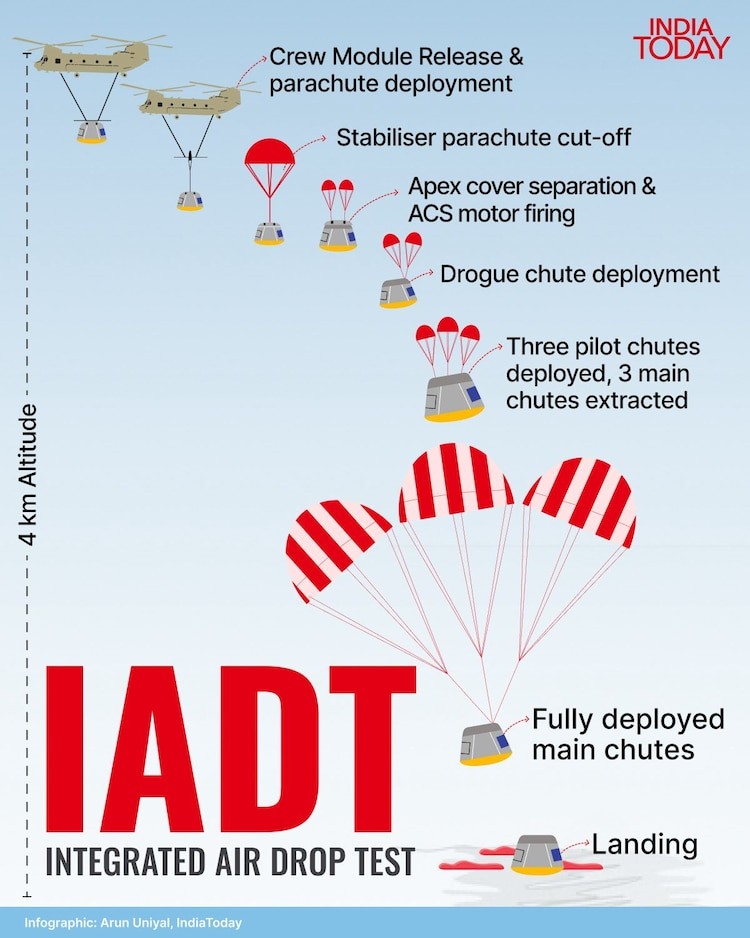
- 28 Aug 2025
In News:
The Indian Space Research Organisation (ISRO)has successfully conducted its firstIntegrated Air Drop Test (IADT-01) for the Gaganyaan human spaceflight programme, marking a critical milestone in validating astronaut safety systems.
Objective of IADT-01
- Test the end-to-end parachute recovery system of the Gaganyaan crew module.
- Demonstrate reliability, sequencing, and redundancy of drogue, pilot, and main parachutes for controlled deceleration and safe splashdown.
- Ensure astronaut safety during the re-entry and landing phases, considered the riskiest part of any human space mission.
Significance
- Validates a vital safety mechanism for Gaganyaan, boosting confidence ahead of upcoming missions like Test Vehicle-D2 (TV-D2) and the first uncrewedGaganyaan mission (G1).
- Strengthens India’s human-rating capabilities, positioning the country to become the fourth nation with independent crewed spaceflight capability.
- Reflects successful inter-agency collaboration among ISRO, Indian Air Force, DRDO, Navy, and Coast Guard.
Gaganyaan Mission Overview
- Crewed mission scheduled for 2028; uncrewed test flight planned in December 2025.
- Mission profile: Carry a three-member crew to low Earth orbit (~400 km) for up to three days, followed by safe return.
- The programme emphasizes astronaut safety, technological reliability, and operational preparedness, with future tests including additional parachute validations, pad abort trials, and sea recovery rehearsals.
Strategic Importance
- Demonstrates India’s capability in human spaceflight, enhancing its global standing in space technology.
- Paves the way for advanced crewed missions and potential applications in scientific research, space exploration, and international collaborations.
India’s Push for 27% Ethanol Blending
- 28 Aug 2025
In News:
India has announced its ambitious plan to increase ethanol blending in petrol to 27% (E27) by 2030, building upon the successful Ethanol Blended Petrol (EBP) Programme launched in 2003. This move aligns with India’s goals of energy security, environmental sustainability, and rural development.
Background and Progress
- EBP Programme: Started with 5% blending, it has grown from less than 2% a decade ago to 10% (E10) by 2022, with 20% blending (E20) projected for 2025, five years ahead of schedule.
- Ethanol Feedstocks: Primarily derived from sugarcane, maize, and surplus food grains, with an increasing push for second-generation ethanol from crop residues and agricultural waste under PM-JI-VAN Yojana.
- Energy Security: India imports nearly 88% of crude oil, spending over $120 billion annually. Ethanol blending reduces crude imports, conserves foreign exchange, and mitigates vulnerability to global price shocks.
- Environmental Goals: Ethanol blends reduce carbon monoxide and hydrocarbon emissions, supporting the National Green Mobility Strategy and India’s Net Zero 2070 commitment.
Economic and Social Benefits
- Farmer Welfare: The programme has channeled over ?1.2 lakh crore to farmers and nearly ?2 lakh crore to distilleries, providing stable markets for sugarcane, maize, and other crops.
- Rural Development: Ethanol distilleries generate employment, promote agro-industries, and reduce distress migration.
- Circular Economy Link: Second-generation ethanol initiatives convert crop residues and waste into energy, addressing stubble burning and enhancing sustainability.
Challenges and Risks
- Food Security: Rising ethanol demand strains maize and grain supplies. In 2023, a 5-million-tonne maize shortfall forced imports, affecting poultry, starch industries, and food prices.
- Water Use: Sugarcane requires 1,500–2,000 litres of water per kg of sugar, risking groundwater depletion in states like Maharashtra and Uttar Pradesh.
- Technological Issues: Higher blends can reduce fuel efficiency by 6–7% in vehicles not designed for ethanol. Adoption of Flex Fuel Vehicles is slow and more costly.
- Supply-Side Constraints: India produced 7 billion litres of ethanol in 2023 but will require over 12 billion litres by 2030. Financially stressed sugar mills and limited investment in grain-based or second-generation plants challenge scaling.
- Infrastructure Needs: Storage, transport, and fuel dispensing networks must expand nationwide to meet E27 targets.
Policy Recommendations
- Feedstock Diversification: Rapid development of second-generation ethanol from crop residues, forestry waste, and municipal solid waste.
- Consumer Incentives: Subsidies for Flex Fuel Vehicles, retrofitting existing engines, and awareness campaigns to ensure adoption.
- Public–Private Partnerships: Investment and collaboration to scale production, distribution, and technology adoption.
- Integration with Clean Energy Transition: Ethanol should complement electric mobility and green hydrogen, serving as a bridge solution for decarbonisation while more transformative technologies mature.
Famine in Gaza
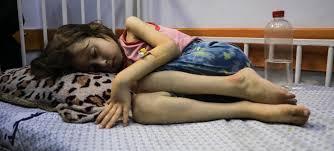
- 28 Aug 2025
In News:
The United Nations has confirmed a famine in Gaza City and surrounding areas, describing it as a “failure of humanity” and a man-made disaster. The declaration follows a report by the Integrated Food Security Phase Classification (IPC), which raised food insecurity in parts of Gaza to Phase 5, the highest level, indicating catastrophic conditions of starvation, destitution, and death.
Scale of the Crisis
- Population affected: Nearly 641,000 people are facing IPC Phase 5 conditions, while 1.14 million (58% of Gaza’s population) are projected to experience emergency-level food insecurity (IPC Phase 4) between mid-August and end of September.
- Children at risk: By June 2026, 132,000 children under five may face life-threatening malnutrition.
- Mortality: Gaza’s Hamas-run health ministry reports 271 deaths due to malnutrition, including 112 children.
- Historical Context: Since 2004, IPC has officially classified only four famines, with the last one in Sudan, 2024.
Causes
The famine is described as “starvation by design” by UN officials:
- Aid Restrictions: Israel has been accused of systematically obstructing humanitarian aid. The UN estimates 600 aid trucks per day are needed, but only 300 trucks are entering daily.
- Conflict Impact: Israel launched a military campaign in response to the Hamas attack on southern Israel in October 2023, leading to mass casualties and displacement. Over 62,000 deaths have been reported in Gaza, with more than 90% of homes damaged or destroyed.
- Infrastructure Collapse: Healthcare, water, sanitation, and hygiene systems have collapsed, exacerbating malnutrition and disease.
International Response
- UN Officials:
- Secretary-General Antonio Guterres called the famine a “moral indictment” and a man-made disaster.
- UNRWA Chief Philippe Lazzarini termed it “starvation by design”.
- UN Human Rights Chief Volker Turk attributed the famine to Israel’s unlawful restriction of aid.
- Global Condemnation:
- UK Foreign Secretary David Lammy described it as a “moral outrage”.
- Humanitarian groups and UN bodies have called for an immediate, at-scale response to prevent widespread starvation.
- Israeli Position: Israel denies a policy of starvation, claiming it has allowed 2 million tons of aid since the conflict began and continues to organize humanitarian corridors and airdrops, though the UN calls these efforts insufficient and sometimes unsafe.
NITI Aayog Report on “Rethinking Homestays: Navigating Policy Pathways”
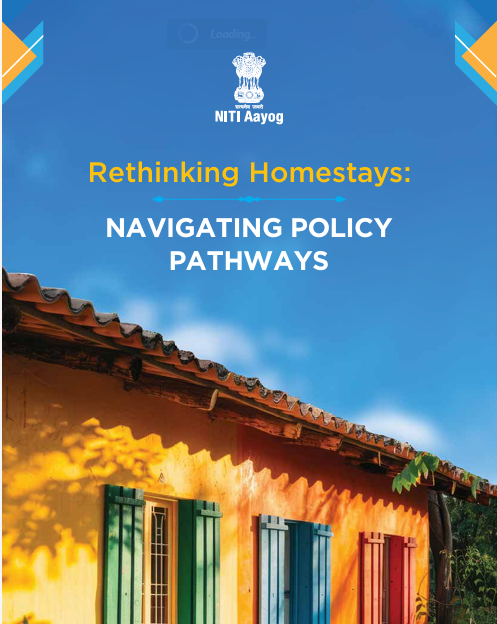
- 28 Aug 2025
In News:
NITI Aayog, in collaboration with the Internet and Mobile Association of India (IAMAI), released the report “Rethinking Homestays: Navigating Policy Pathways”. The document provides a strategic roadmap for strengthening India’s homestay and BnB sector, emphasizing its role in tourism, rural livelihoods, and cultural preservation.
Key Highlights of the Report
- Tourism & Cultural Value: Homestays offer travelers culturally immersive experiences while promoting local entrepreneurship, heritage conservation, and community participation.
- Economic Role: They serve as engines of livelihood creation, particularly in rural and semi-urban areas, fostering inclusive and sustainable growth.
- Regulatory Approach: The report calls for light-touch, transparent regulation to balance safety, consumer trust, and ease of doing business.
- Digital Integration: Strong emphasis on leveraging digital platforms for marketing, consumer engagement, and capacity building of hosts.
- Public–Private Partnerships: Collaboration with stakeholders like Airbnb, MakeMyTrip, IAMAI, ISPP, Chase India, and The Convergence Foundation was highlighted as critical for shaping a vibrant ecosystem.
- Best Practices: State-level examples from Goa, Kerala, Uttarakhand, and Uttar Pradesh showcase scalable models in policy, governance, and community-led initiatives.
- Policy Recommendations: Suggests flexible frameworks, skill development, financial access, and infrastructure support to strengthen the sector.
Significance for India
- Tourism Development – Homestays diversify India’s hospitality sector, offering authentic alternatives to conventional hotels.
- Employment Generation – Potential to create entrepreneurial opportunities for women, youth, and local communities.
- Cultural Preservation – Encourages conservation of art, craft, cuisine, and heritage while generating income.
- Rural Transformation – Helps bridge urban–rural divides by promoting community-based tourism.
- Sustainability – Supports low-impact tourism models, aligning with SDG 8 (Decent Work & Economic Growth) and SDG 11 (Sustainable Cities & Communities).
About NITI Aayog
- Established: 1 January 2015, replacing the Planning Commission.
- Chairperson: Prime Minister of India.
- Vice-Chairperson: Appointed by PM.
- Members: Full-time, part-time experts, ex-officio Union Ministers.
- Governing Council: Chief Ministers of states and LGs of UTs.
- Functions:
- Premier policy think tank for cooperative federalism.
- Provides strategic and long-term policy frameworks.
- Monitors and evaluates development programmes.
- Promotes innovation, entrepreneurship, and technology adoption.
- Coordinates between Centre, States, and global partners.
- Nature: Advisory, yet influential in shaping policies; key driver of initiatives like Aspirational Districts Programme, Atal Innovation Mission, and SDG localization.
Climate Change and Workplace Heat Stress
- 28 Aug 2025
In News:
The WHO–WMO joint report (2025), Climate Change and Workplace Heat Stress, warns that rising global temperatures are creating an unprecedented occupational health and productivity crisis. The year 2024 was the warmest on record, with global average temperatures 1.45°C above pre-industrial levels, and the decade 2015–2024 being the hottest ever recorded.
Key Findings
- Productivity Losses: Each 1°C rise in Wet-Bulb Globe Temperature (WBGT) above 20°C reduces global worker productivity by 2–3%. Sun exposure further raises WBGT by 2–3°C, amplifying risk.
- Scale of Exposure: Over 2.4 billion workers are directly exposed; annually, 22.85 million injuries, 18,970 deaths, and 2.09 million disability-adjusted life years (DALYs) are linked to workplace heat stress (ILO estimates).
- Geographical Hotspots: South Asia, Sub-Saharan Africa, and the Middle East face the highest risks. Heat stress now affects 30% of the global population seasonally or daily.
- Health Impacts: More than one-third of workers in hot conditions report physiological heat strain (hyperthermia, kidney dysfunction, dehydration, neurological problems). WHO safety guidance (1969) recommends that core body temperature during an 8-hour shift not exceed 38°C, a threshold increasingly breached.
- Climate Change Dimension: Daytime peaks of 40–50°C are becoming frequent even outside the tropics. Europe’s 2023 heatwave saw worker fatalities, showing that occupational heat stress is no longer limited to equatorial regions.
India’s Experience
In India, informal workers in brick kilns, construction, agriculture, and power looms are the most affected. Many begin work before sunrise to avoid peak heat, yet still suffer dehydration, dizziness, and lost wages as work hours shrink. Indoor workplaces with poor ventilation often become “furnaces,” leading to chronic fatigue, kidney strain, and even fatalities. By 2030, the ILO projects India could lose 34 million full-time equivalent jobs, particularly in agriculture and construction, due to heat stress.
Wider Implications
- Public Health Burden – Rising cases of heat stroke, cardiovascular collapse, and chronic kidney disease (26.2 million cases in 2020 alone) strain already weak health systems.
- Economic Losses – Developing economies face shrinking GDP as productivity drops; agriculture and construction are most vulnerable.
- Social Inequality – The poor, migrant labourers, and women are disproportionately at risk due to unsafe working conditions and lack of social protection.
- Climate Justice – Regions contributing least to emissions, like Bangladesh and Sub-Saharan Africa, suffer the harshest effects, deepening global inequities.
- Food Security – Agricultural labour productivity loss disrupts crop cycles and threatens farmer incomes, worsening hunger and malnutrition.
- Legal Burden – Rising occupational illness cases risk overwhelming compensation systems and highlight gaps in labour safety laws.
Adaptation Strategies
- Occupational Heat Action Plans: Early warning systems, rescheduling work timings, shaded shelters, and worker training.Example: The Ahmedabad Heat Action Plan (India) has reduced heatwave mortality through alerts, shelters, and training.
- Infrastructure & Technology: Cooling shelters, hydration points, and mechanisation to reduce manual strain.Example: Bangladesh’s garment sector has piloted low-cost ventilation and cooling fans, lowering worker fatigue.
- Labour Policy Reforms: Enforcing heat-index-based work-hour rules, mandatory rest breaks, and compensation for heat-linked illnesses.Example: Qatar bans outdoor work between 10 am–3:30 pm during peak summer.
- Public Health Measures: Hydration protocols, health screenings, and recognition of heat stress as an occupational disease.Example: US OSHA’s “Water–Rest–Shade” campaigninstitutionalises hydration and rest breaks.
- Global & National Coordination: Mainstreaming heat stress into ILO conventions, COP climate talks, and SDG frameworks, with climate finance support for vulnerable economies.Example: Australia integrates climate projections into mining and agriculture workplace safety standards.
National Tiger Conservation Authority’s Corridor Restriction
- 27 Aug 2025
In News:
The National Tiger Conservation Authority (NTCA), the apex statutory body under the Ministry of Environment, Forest and Climate Change (MoEFCC), has recently issued a clarification restricting the definition of tiger corridors to only the 32 “least cost pathways” identified in 2014 and those recorded in Tiger Conservation Plans (TCPs) of individual reserves. This excludes later studies by the Wildlife Institute of India (WII) (2016, 2021) and data from the All-India Tiger Estimation (AITE) exercises.
What are Tiger Corridors?
Tiger corridors are natural pathways that connect fragmented tiger habitats, allowing for:
- Genetic flow and long-term survival of populations.
- Migration and dispersal between reserves.
- Minimisation of human-wildlife conflict through guided movement.
Projects that require land in or around these corridors or reserves need statutory clearance from the Standing Committee of the National Board for Wildlife (SC-NBWL) under the Wildlife Protection Act, 1972.
About NTCA
- Established: 2005 (through 2006 amendment of Wildlife Protection Act, 1972).
- Chairperson: Union Minister of Environment, Forest and Climate Change.
- Functions:
- Approves TCPs of states.
- Provides financial and technical support for tiger conservation.
- Oversees Project Tiger implementation.
- Conducts All-India Tiger Estimation (AITE) every 4 years.
- Ensures ecological connectivity through corridor protection.
The Recent Controversy
- NTCA had earlier told the Bombay High Court (July 2025) that multiple benchmarks would be used to identify corridors, including:
- Protected areas with tiger occupancy.
- 2014 least-cost pathways.
- WII studies (2016, 2021).
- AITE distribution data.
- However, in its latest clarification, NTCA restricted corridors only to 2014 least-cost pathways and TCP records, ignoring updated scientific models.
Potential Beneficiaries
Industrial projects, particularly in Maharashtra, such as:
- Western Coalfields Limited’s Durgapur open cast mines.
- Lloyds Metals & Energy’s Surajgarh iron ore mines in Gadchiroli.
Scientific Concerns
- 2014 NTCA Report itself noted that its corridors were “minimal requirement” and alternative connectivities also needed conservation.
- Newer studies (e.g., Circuitscape modelling, 2025) suggest at least 192 corridors across 10 central Indian states, far beyond the restricted 32.
- Narrowing protection risks fragmentation of habitats, reducing gene flow and increasing chances of local extinctions.
Fortified Rice Scheme Extended to 2028
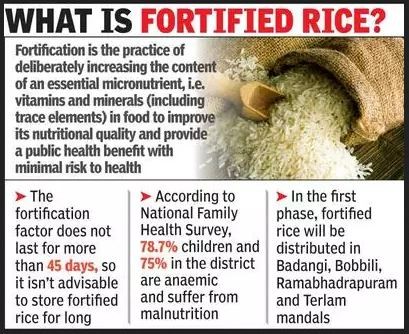
- 27 Aug 2025
In News:
The Union Cabinet has approved the continuation of the universal supply of fortified rice under all government food safety net schemes till December 2028, with 100% central funding of ?17,082 crore. This initiative is part of India’s broader strategy to combat anaemia, malnutrition, and hidden hunger, which remain major public health challenges.
Evolution of the Scheme
- 2018: Launch of Anemia Mukt Bharat (AMB) initiative by MoHFW, emphasising fortified foods.
- 2019: Pilot project for rice fortification introduced in select districts.
- 2022: Government approved national scale-up of fortified rice across welfare schemes.
- March 2024: Fortified rice fully replaced normal rice in all central schemes.
- 2025: Cabinet approved extension till 2028, ensuring continuity with dedicated funding.
Nodal Ministries & Agencies
- Department of Food and Public Distribution (DFPD) under Ministry of Consumer Affairs → implementing agency.
- FSSAI (Food Safety and Standards Authority of India) → sets fortification standards.
- Convergence with Ministry of Education, MoHFW, Ministry of Women and Child Development, and NDDB Foundation for Nutrition.
Components of the Programme
- Public Distribution System (PDS): Fortified rice supplied through ration shops.
- PM POSHAN (Mid-Day Meal): Fortified rice used in school meals; guidelines also promote Double Fortified Salt (DFS) and fortified edible oil.
- Integrated Child Development Services (ICDS): Supplies fortified staples to children and women.
- Special Schemes: Distribution under Wheat-Based Nutrition Programme (WBNP) and Scheme for Adolescent Girls (SAG).
- Complementary Nutrition Initiatives:NDDB’s Gift Milk Programme has provided 7.1 lakh litres of fortified milk, benefitting 41,700 children in 257 schools across 11 states.
Nutritional Focus
- Micronutrients in Fortified Rice: Iron, Folic Acid, and Vitamin B12 → combat iron-deficiency anaemia, support neurological and cognitive health.
- Double Fortified Salt (DFS): Prevents anaemia and goitre.
- Fortified Edible Oil: Provides Vitamins A & D, preventing deficiencies.
Key Features
- Universal Coverage: Fortified rice supplied across all central schemes.
- Cost Coverage: Entire fortification cost borne by the Government of India.
- Monitoring & Accountability: States/UTs tasked with ensuring quality and compliance.
- Multi-Sectoral Approach: Linked with nutrition awareness campaigns and Anemia Mukt Bharat.
- Private & CSR Partnerships: NFN mobilises funds and awareness through CSR and donations.
Wider Context – Food Processing Linkages
The Ministry of Food Processing Industries (MoFPI) supports complementary schemes like:
- PM Kisan SAMPADA Yojana (PMKSY)
- PLI Scheme for Food Processing Industry (PLISFPI)
- PM Formalization of Micro Food Processing Enterprises (PMFME)
These aim to improve supply chains, reduce wastage, and enhance processing levels – strengthening nutrition outcomes alongside fortification.
RBI Discussion Paper on Inflation Targeting
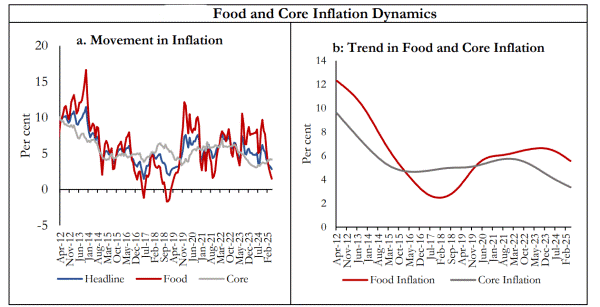
- 27 Aug 2025
In News:
The Reserve Bank of India (RBI), in August 2025, released its discussion paper on reviewing India’s Flexible Inflation Targeting (FIT) framework, which is due for renewal in March 2026. The paper seeks public feedback on key questions such as whether the 4% target remains optimal, whether the 2–6% tolerance band should be revised, and whether the target should be expressed as a point or only a range.
Evolution of the Framework
- Adopted in 2016, the FIT framework formalised inflation targeting in India.
- Current mandate: 4% CPI-based inflation target with a tolerance band of 2–6%, jointly set by the RBI and the Government of India.
- Review cycle: Every five years, with the next mandate to begin April 2026.
Rationale for Retaining the 4% Target
- Credibility with Investors: Raising the target above 4% could be perceived as policy dilution, eroding credibility. Rating agencies like S&P Global recently upgraded India’s rating (BBB), citing the RBI’s strong inflation management.
- Institutional Stability: The framework has strengthened the Monetary Policy Committee (MPC) process and fiscal discipline.
- Domestic Outcomes: Headline CPI inflation has mostly remained within the 2–6% band. In July 2025, it hit 1.55%, the second-lowest since the series began.
- External Balance: Low and stable inflation safeguards the rupee, maintains external competitiveness, and prevents capital outflows.
Headline vs Core Inflation Debate
- Economic Survey 2023–24: Suggested targeting core inflation (excluding food and fuel) as food inflation is largely supply-driven and beyond monetary control.
- RBI’s View: Headline CPI should remain the target, as persistent food shocks spill over into wages, rents, and production costs, influencing core inflation.
- Global Norm: Nearly all inflation-targeting countries focus on headline CPI; Uganda is the only exception.
- Indian Context: Food has ~50% weight in CPI. Excluding it would undermine policy relevance for households and workers.
Key Issues Under Review
- Target Level: Lowering below 4% could hurt growth; raising above 4% risks credibility loss.
- Tolerance Band: Debate on retaining the 2–6% range, narrowing it, or removing it. While a band allows flexibility, it may reduce accountability.
- Inflation Volatility: Between 2014–2025, headline CPI ranged from 1.5% to 8.6%, mainly due to food prices, while core inflation remained relatively stable.
Positive Outcomes of the Framework
- Anchored Expectations: Households and firms now base decisions around a credible 4% anchor, reducing uncertainty.
- Investor Confidence: Predictable inflation management has lowered risk premiums on Indian assets, boosting FDI and portfolio inflows.
- Improved Sovereign Ratings: Low inflation stability has supported fiscal credibility, earning global recognition.
- Resilience to Shocks: Despite global supply disruptions and oil price volatility, India avoided runaway inflation.
India’s Draft Climate Finance Taxonomy

- 27 Aug 2025
In News:
In May 2025, the Ministry of Finance (Department of Economic Affairs) released India’s draft Climate Finance Taxonomy (CFT) for public consultation. This initiative is timely, as it coincides with India’s expanding climate finance ecosystem, including green bonds, carbon credit trading, and global commitments under the Paris Agreement and net-zero targets by 2070.
What is a Climate Finance Taxonomy?
- A classification framework that defines which sectors, technologies, and activities qualify as climate-aligned investments.
- It is described as a “living document”, evolving with India’s domestic priorities and international climate obligations.
- Core purpose: To mobilise public and private finance, ensure transparency, and prevent greenwashing.
Key Features of India’s Draft CFT
- Scope: Covers activities contributing to mitigation, adaptation, and low-carbon transition.
- Review Mechanism
- Annual reviews for course correction.
- Five-year reviews aligned with India’s Nationally Determined Contributions (NDCs) and the UNFCCC global stocktake.
- Legal Coherence
- Designed to be consistent with Indian laws (Energy Conservation Act, SEBI regulations, Carbon Credit Trading Scheme).
- Harmonised with international standards for credibility.
- Substantive Clarity: Provides clear, precise, and updated definitions that are accessible to both experts and non-experts.
- Inclusivity
- Simplified compliance for MSMEs, informal sector actors, and vulnerable communities.
- Staggered timelines for smaller entities to avoid exclusion.
- Institutional Accountability
- Proposal for a standing review unit/expert committee.
- Public dashboards to ensure transparency and investor confidence.
Significance
- Boosts Investor Confidence: Provides clarity for domestic and global investors in India’s green economy.
- Ensures Transparency: Prevents mislabeling of projects as “green,” tackling greenwashing risks.
- Mobilises Finance: Unlocks predictable, science-based finance flows for mitigation and adaptation.
- Supports Net-Zero Goals: Complements instruments like green bonds and carbon credit markets.
- Global Positioning: Strengthens India’s role in shaping international norms on climate finance.
Mercator Projection Map
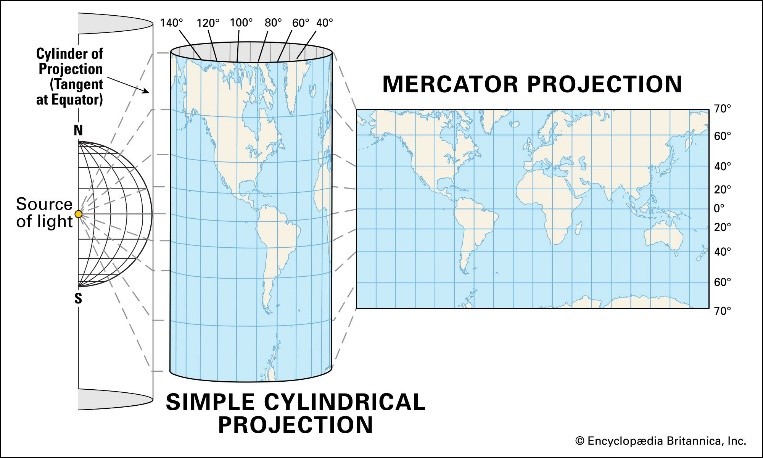
- 27 Aug 2025
In News:
The African Union (AU) has endorsed the “Correct the Map”campaign, calling for the replacement of the Mercator projection with modern alternatives that represent Africa’s true size. This move is not just cartographic—it is deeply political, tied to questions of historical justice, cultural representation, and global perception.
The Mercator Projection: Origins and Features
- Introduced: 1569 by Gerardus Mercator, a Flemish mathematician and cartographer.
- Purpose: Designed for navigation, enabling sailors to follow a straight line of constant compass bearing (Rhumb lines/loxodromes).
- Structure:
- Meridians (longitude): parallel, vertical, equally spaced.
- Parallels (latitude): horizontal, spacing increases away from the equator.
- Grid forms right angles.
- Strengths: Conformal projection that preserves shapes and angles, ideal for maritime exploration.
- Limitations: Distorts area and scale. True scale exists only along the equator; distortion grows near the poles.
Distortions and Bias
- Africa & South America appear much smaller than their real size.
- Europe, North America, and Greenland are disproportionately enlarged.
- Example: Greenland (≈2.1 million sq km) appears similar in size to Africa (≈30 million sq km).
- Such distortions fed into Eurocentric worldviews, reinforcing colonial narratives of Africa as “smaller” and “conquerable.”
Corrective Measures
- Gall-Peters Projection (1970s): Area-accurate but distorts shapes. Adopted in some schools, e.g., Boston (2017).
- Equal Earth Projection (2018): Balances shape and area, providing a fairer representation of continents.
- AU’s Endorsement: By backing the Equal Earth projection, the AU aims to restore “Africa’s rightful place on the global stage,” highlighting the continent’s true scale and importance.
Agni-5 Missile
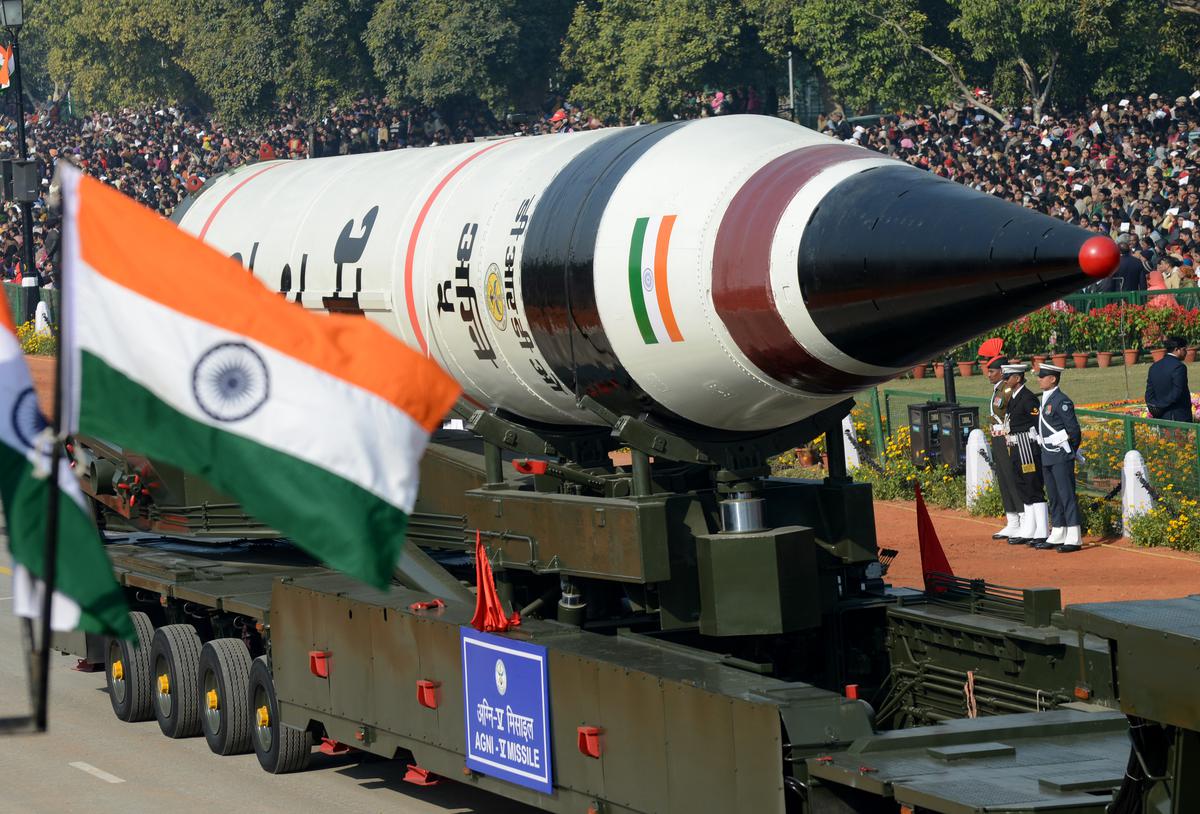
- 26 Aug 2025
In News:
India has successfully conducted the test of its nuclear-capable Agni-5 ballistic missile from the Integrated Test Range (ITR), Chandipur, Odisha. The launch was carried out under the Strategic Forces Command (SFC) and validated all operational and technical parameters, marking a significant boost to India’s strategic deterrence capabilities.
About Agni-5 Missile
- Type: Land-based Intercontinental Ballistic Missile (ICBM).
- Developer: Defence Research and Development Organisation (DRDO).
- Range: Beyond 5,000 km, capable of covering most of Asia and parts of other continents.
- Payload Capacity: Equipped with Multiple Independently Targetable Reentry Vehicle (MIRV) technology, enabling it to carry and deliver up to three nuclear warheads simultaneously at different targets.
- Technologies Used: Modern navigation, guidance, warhead, and propulsion systems, ensuring high accuracy and survivability.
Ballistic Missiles – Classification by Range
Ballistic missiles are rocket-propelled strategic weapons that follow a ballistic trajectory after the powered phase:
- Short-range: < 1,000 km (Tactical role).
- Medium-range: 1,000–3,000 km (Theater role).
- Intermediate-range: 3,000–5,500 km.
- Intercontinental (ICBM): > 5,500 km (Strategic role).
Agni-5, with its long range and MIRV capability, places India in the league of nations with advanced ICBM technology.
Strategic Significance
- Strengthens nuclear deterrence under India’s credible minimum deterrence and no first use (NFU) doctrines.
- Enhances India’s security architecture amidst evolving regional and global threats.
- Positions India among the select group of countries (U.S., Russia, China, France) with operational ICBM and MIRV capability.
National Policy to Promote Globally Important Agricultural Heritage Systems (GIAHS) in India
- 26 Aug 2025
In News:
- The Globally Important Agricultural Heritage Systems (GIAHS) programme, launched by the Food and Agriculture Organization (FAO) in 2002 at the World Summit on Sustainable Development, aims to conserve unique agricultural systems that sustain biodiversity, traditional knowledge, and rural livelihoods while adapting to modern challenges such as climate change, biodiversity loss, and community displacement.
- GIAHS adopts a multi-stakeholder approach by offering technical assistance, enhancing the value of traditional agricultural knowledge, and stimulating markets through agrotourism, product branding, and sustainable value chains.
India’s Recognised GIAHS Sites
Currently, India hosts three GIAHS sites, each reflecting diverse agro-ecological and cultural traditions:
- Koraput Region (Odisha):
- Known for subsistence paddy cultivation on highland slopes.
- Conserves a wide range of paddy landraces and farmer-developed varieties.
- Rich in medicinal plant genetic resources, closely linked with indigenous tribal knowledge.
- Supported by community seed banks, organic farming practices, and branding initiatives under state biodiversity programmes.
- Kuttanad Farming System (Kerala):
- A rare below-sea-level farming landscape.
- Comprises wetlands for paddy, garden lands for coconut and food crops, and inland water bodies for fishing and shell collection.
- Infrastructure development works under RKVY-DPR projects, such as HaritamHarippad in Alappuzha, and research on ecological utilization of water hyacinth are underway.
- Saffron Heritage of Kashmir:
- Represents a traditional agro-pastoral system of saffron cultivation.
- Characterized by organic farming practices, intercropping, and soil conservation.
- Supported through Rashtriya Krishi Vikas Yojana (RKVY) and the Mission for Integrated Development of Horticulture (MIDH) for revival and economic sustainability.
National Support Mechanisms
- Government Schemes: RKVY, MIDH, and other sectoral interventions promote conservation, branding, and livelihood opportunities.
- Biodiversity Revival: Emphasis on neglected crops and forgotten foods to ensure resilience.
- Integration with Research: State-supported projects in Kerala and Odisha enhance scientific validation and infrastructure.
Significance
- Ensures balance between conservation and socioeconomic development.
- Protects traditional knowledge systems and cultural landscapes.
- Enhances climate resilience and strengthens India’s commitment to sustainable agriculture.
- Promotes rural development, agrotourism, and niche product markets, thereby contributing to farmer incomes.
NAVYA Initiative
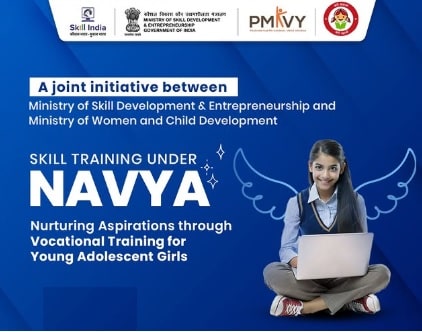
- 26 Aug 2025
In News:
- The Government of India launched the NAVYA (Nurturing Aspirations through Vocational training for Young Adolescent Girls) initiative in June 2025 to strengthen the socio-economic empowerment of adolescent girls (aged 16–18 years), particularly in aspirational districts.
- It is a joint initiative of the Ministry of Skill Development & Entrepreneurship (MSDE) and the Ministry of Women & Child Development (MWCD).
Objectives of NAVYA
- Vocational Training: Provide demand-driven skilling in both traditional and modern sectors.
- Holistic Development: Cover modules on health, nutrition, hygiene, life skills, financial literacy, and legal awareness.
- Enhancing Employability: Facilitate internships, apprenticeships, and job linkages, along with promoting self-employment.
- Gender-Inclusive Skilling: Ensure a safe and supportive training environment for adolescent girls.
- Bridging Gaps: Connect education and livelihood opportunities in underserved and remote regions.
Key Features
- Coverage: Implemented across 19 States and 27 districts, including Barpeta (Assam), Gaya (Bihar), Bastar (Chhattisgarh), Nuh (Haryana), Chamba (Himachal Pradesh), Baramulla (J&K), Raichur (Karnataka), Gadchiroli (Maharashtra), Rayagada (Odisha), Dholpur (Rajasthan), Virudhunagar (Tamil Nadu), Sonbhadra (Uttar Pradesh), and Haridwar (Uttarakhand), among others.
- Beneficiaries: 3,850 adolescent girls are being trained under Pradhan Mantri Kaushal Vikas Yojana (PMKVY) 4.0.
- Modern Job Roles: Training includes digital marketing, cybersecurity, AI-enabled services, green jobs, and other emerging sectors.
- Future Readiness: Modules on life skills, digital competence, and financial literacy prepare participants for evolving workforce demands.
Significance
- Strengthens women-centric skilling ecosystem.
- Promotes inclusive growth and gender equity in workforce participation.
- Supports Atmanirbhar Bharat by creating a skilled workforce in emerging sectors.
- Contributes to SDG 4 (Quality Education), SDG 5 (Gender Equality), and SDG 8 (Decent Work and Economic Growth).
Anna-Chakra
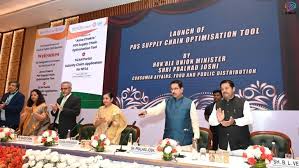
- 26 Aug 2025
In News:
The Government of India has introduced “Anna-Chakra”, a digital supply chain optimisation tool under the Public Distribution System (PDS), aimed at improving efficiency, reducing costs, and minimizing environmental impact in foodgrain distribution.
Implementation Status
- Implemented in 30 out of 31 States/UTs; yet to be implemented in Manipur.
- States/UTs covered include Punjab, Telangana, Tamil Nadu, Rajasthan, Bihar, Gujarat, Maharashtra, Uttar Pradesh, Delhi, J&K, Ladakh, Kerala, Karnataka, Odisha, among others.
Development and Collaboration
- Spearheaded by the Department of Food and Public Distribution.
- Developed in collaboration with:
- World Food Programme (WFP)
- Foundation for Innovation and Technology Transfer (FITT), IIT-Delhi
Working of Anna-Chakra
- Uses advanced algorithms to identify optimal routes for foodgrain movement across supply chain nodes.
- Covers 4.37 lakh Fair Price Shops (FPSs) and around 6,700 warehouses.
- Integrated with:
- FOIS (Freight Operations Information System) of Railways through the Unified Logistics Interface Platform (ULIP).
- PM Gati Shakti platform, which now houses geo-locations of FPSs and warehouses.
Key Benefits
- Financial Savings: Estimated ?250 crore per annum through reduction in transportation costs.
- Efficiency Gains: Faster delivery and streamlined PDS operations in the world’s largest food security programme benefiting 81 crore citizens.
- Environmental Impact: Reduction in fuel consumption and CO? emissions, aligning with India’s climate commitments.
- Operational Improvement: Ensures seamless coordination among multiple stakeholders, from farmers to FPS dealers.
Significance
Anna-Chakra represents a major leap in digitally enabled governance and logistics management, combining technology, sustainability, and welfare delivery. By cutting costs and carbon emissions while enhancing the efficiency of foodgrain delivery, it strengthens India’s food security architecture under the National Food Security Act (NFSA).
e-Jagriti Platform
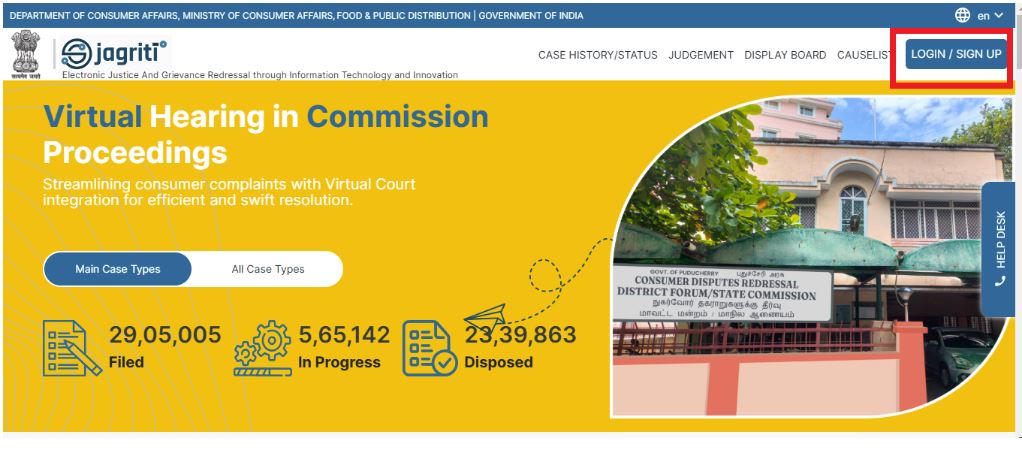
- 26 Aug 2025
In News:
In a significant boost to India’s consumer protection framework, ten States along with the National Consumer Disputes Redressal Commission (NCDRC) achieved a disposal rate of over 100% in July 2025. This indicates that the number of consumer cases resolved exceeded the number of new cases filed, showcasing efficiency in grievance redressal.
Key Disposal Achievements
- NCDRC: 122%
- Tamil Nadu: 277%
- Rajasthan: 214%
- Telangana: 158%
- Himachal Pradesh & Uttarakhand: 150% each
- Meghalaya: 140%
- Kerala: 122%
- Puducherry: 111%
- Chhattisgarh: 108%
- Uttar Pradesh: 101%
This trend highlights faster case resolution and effective functioning of consumer commissions across India.
The e-Jagriti Platform
The success is largely aided by e-Jagriti, a flagship digital initiative of the Department of Consumer Affairs, designed to strengthen the consumer dispute redressal system.
Objectives
- Computerization and networking of all Consumer Commissions (National, State & District).
- Enhancing transparency, efficiency, and speed in dispute resolution.
- Providing accessible, cost-effective, and paperless grievance redressal.
Features
- E-filing of complaints with online fee payment.
- Real-time case tracking and access to judgments.
- AI-powered Smart Search for archived complaints/judgments.
- Voice-to-text conversion of judgments and case details using AI/ML.
- Integration of multiple platforms:
- Online Case Monitoring System (OCMS)
- E-Daakhil
- NCDRC Case Monitoring System
- CONFONET website
- Mediation application
Since its launch, over 2 lakh users (including NRIs) have registered on e-Jagriti, with 85,531 cases filed online in 2025 alone, demonstrating growing public trust.
Significance
- Strengthens consumer rights and access to justice.
- Reduces backlog and delays through tech-driven case management.
- Promotes digital governance and transparency in consumer protection.
- Aligns with citizen-centric reforms and Digital India Mission.
UdyamSakhi Portal
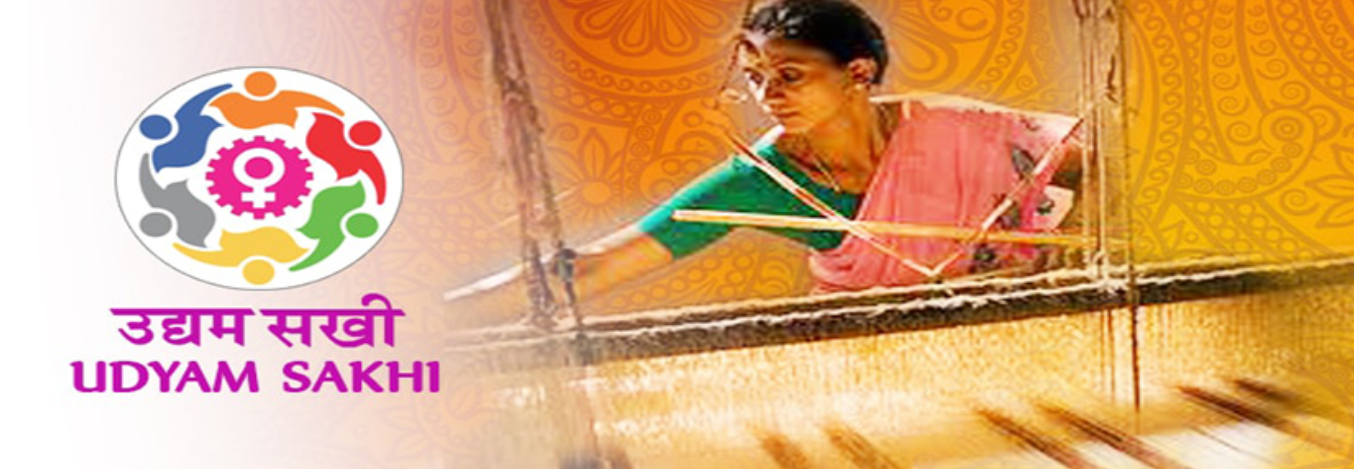
- 25 Aug 2025
In News:
The UdyamSakhi Portal, launched by the Ministry of Micro, Small and Medium Enterprises (MSME) in March 2018, is helping women entrepreneurs across India start, build, and expand their businesses, fostering self-reliance and economic empowerment.
Objectives and Significance
The portal serves as a one-stop resource for existing and prospective women entrepreneurs, providing information on:
- Financial schemes such as the Prime Minister’s Employment Generation Programme (PMEGP), Credit Guarantee Fund Trust for Micro and Small Enterprises (CGTMSE), MUDRA, and Trade Receivables e-Discounting System (TReDS).
- Policies, programs, and business plan preparation.
- Nodal offices and supporting organizations of the MSME Ministry across states.
It also updates users on exhibitions, trade fairs, and international events, creating opportunities to connect with markets and expand business reach.
Programmatic Functions
UdyamSakhi provides a comprehensive suite of services, including:
- Entrepreneurship learning tools and guidance for business model creation
- Incubation facilities for nurturing startups
- Training programs for fundraising
- Mentorship support and one-on-one investor interactions
- Market survey support
- Learning and development through education, information, technical assistance, and training
The portal acts as a network for nurturing entrepreneurship, especially for low-cost products and services, enabling women to become self-reliant and self-sufficient.
Outreach and Impact
Since its inception, the portal has seen 4,535 women register, demonstrating its growing impact on women-led entrepreneurship in the MSME sector. Developed with an expenditure of ?43.52 lakh, the portal continues to expand access to resources, guidance, and opportunities for women entrepreneurs nationwide.
Sliteye Shark
- 25 Aug 2025
In News:
For the first time, scientists have recorded the sliteye shark (Loxodonmacrorhinus) in the Great Chagos Bank, the world’s largest coral atoll in the Indian Ocean. The discovery underscores the hidden biodiversity of the Chagos Archipelago and its Marine Protected Area (MPA), highlighting the ecological importance of deepwater habitats.
About the Sliteye Shark
The sliteye shark is a small-bodied requiem shark in the family Carcharhinidae and is the only species in the genus Loxodon. Named for its distinctive slit-like eyes, the species is adapted to low-light, deepwater environments, though it can also inhabit clear, shallow seas.
- Scientific Name:Loxodonmacrorhinus
- Size: Up to 95 cm in length
- Features: Slender body, long narrow face, large eyes, short furrows at mouth corners, small teeth with protruding tips, absent or rudimentary ridge between dorsal fins, gray coloration with white belly, dark-edged caudal and first dorsal fins
- Distribution: Tropical waters of the Indian and western Pacific Oceans, including countries such as India, Indonesia, Sri Lanka, Japan, Australia, China, Kenya, South Africa, and others between 34°N and 30°S
Discovery in Chagos
- Researchers observed two sliteye sharks at depths of 23–29 metres, just 11 km apart, using Baited Remote Underwater Video systems in deep seagrass habitats on the southern rim of the Great Chagos Bank. These meadows, first mapped in 2016 using satellite tracking of green turtles, support more than 110 fish species and are now confirmed as important for sliteye sharks as well.
Conservation Concerns
- The sliteye shark is classified as Near Threatened by the IUCN Red List, with populations projected to decline by approximately 30% over the next 15 years due to heavy fishing pressure.
- The Chagos discovery raises critical questions regarding the species’ abundance, habitat use, and conservation needs.
- The study forms part of a project led by Swansea University in collaboration with international partners, funded by the Bertarelli Foundation, with full findings expected in 2026. The results strengthen the case for protecting deepwater seagrass habitats in the Indian Ocean.
Sakura Science Programme 2025
- 25 Aug 2025
In News:
- A group of 34 students from government schools across India has been selected to participate in the Sakura Science Programme 2025, a prestigious Japan-Asia Youth Exchange Program in Science.
- The initiative, implemented by the Japan Science and Technology Agency (JST), provides young learners an opportunity to explore cutting-edge scientific innovations and experience Japanese culture firsthand.
Programme Details
- The 2025 edition of the programme was held, with participants from India, Egypt, Ghana, Kenya, Nigeria, South Africa, and Zambia. The Indian delegation consists of students, hailing from nine states—Andhra Pradesh, Bihar, Delhi, Himachal Pradesh, Lakshadweep, Odisha, Puducherry, West Bengal, and the Regional Institute of Education (RIE) demonstration schools in Ajmer, Bhopal, Bhubaneswar, and Mysuru. The students will be accompanied by three supervisors.
- The selected students were flagged off at a ceremony at NCERT, New Delhi, hosted by the Ministry of Education’s Department of School Education & Literacy (DoSEL), attended by key officials including Sanjay Kumar, Secretary of DoSEL, Professor Prakash Chandra Agrawal, Joint Director of NCERT, and Archana Sharma Awasthi, Joint Secretary of DoSEL.
Background and Objectives
Launched globally in 2014, the Sakura Science Programme aims to foster scientific curiosity among youth and promote international collaboration. India joined the programme in 2016, and since then, over 630 Indian students and 90 supervisors have participated.
The programme’s objectives include:
- Developing talented human resources overseas with potential contributions to science and technology innovation.
- Facilitating international brain circulation.
- Promoting continuous collaboration between Japanese and foreign educational and research institutes.
- Strengthening diplomatic relations through science and technology exchanges.
Through short-term visits to Japan, students gain exposure to advanced scientific research, innovation ecosystems, and Japanese culture, fostering both academic growth and cross-cultural understanding.
Nepal Eliminates Rubella
- 25 Aug 2025
In News:
The World Health Organization (WHO) has officially announced that Nepal has eliminated rubella as a public health problem, marking a significant achievement in the country’s fight against vaccine-preventable diseases. Nepal is the sixth country in the WHO South-East Asia Region to achieve rubella elimination, joining Bhutan, DPR Korea, Maldives, Sri Lanka, and Timor-Leste.
About Rubella
- Rubella, also known as German measles or three-day measles, is a highly contagious viral infection caused by the Rubella virus, an enveloped, single-stranded RNA virus distinct from the measles virus.
- Rubella primarily spreads through coughing, sneezing, or contact with contaminated surfaces, and can also be transmitted from a pregnant woman to her fetus.
- While rubella generally causes mild or no symptoms, the hallmark is a spotty red rash starting on the face or behind the ears and spreading to the neck and body.
- Infection during early pregnancy is particularly dangerous, with a 90% chance of virus transmission to the fetus, potentially causing miscarriage, stillbirth, or Congenital Rubella Syndrome (CRS). CRS may result in hearing impairments, eye and heart defects, and lifelong disabilities, including autism, diabetes, and thyroid dysfunction.
- Currently, there is no specific treatment for rubella, and symptoms are generally managed with rest and fever-reducing medications. Prevention through vaccination is key: the measles-mumps-rubella (MMR) vaccine is safe, highly effective, and provides lifelong protection.
Nepal’s Rubella Elimination Journey
- Nepal introduced the rubella-containing vaccine in its immunization program in 2012, targeting children aged 9 months to 15 years. A second dose was added to the routine immunization schedule in 2016.
- Nationwide campaigns in 2012, 2016, 2020, and 2024 helped achieve over 95% coverage for at least one dose, despite challenges such as the COVID-19 pandemic and earthquakes in 2015 and 2023.
- The country implemented innovative strategies such as observing an “immunization month,” outreach programs for missed children, and incentives for districts to achieve “fully immunized” status. Nepal also strengthened rubella surveillance through a robust laboratory testing algorithm, the first of its kind in the WHO South-East Asia Region.
Regional and Global Recognition
The Regional Verification Commission for Measles and Rubella (SEA-RVC), established in 2016, reviewed data from Nepal’s National Verification Committee and recommended verification of rubella elimination. Nepal’s Ministry of Health and Population acknowledged the contribution of government leadership, health workers, volunteers, and communities, alongside support from WHO and Gavi, in achieving this milestone.
The WHO South-East Asia Region initially aimed to eliminate measles and control rubella by 2020, later revising the target to 2023, and finally extending to 2026 due to setbacks caused by the COVID-19 pandemic. Nepal’s early achievement underscores the strength of its national immunization program and serves as a model for other countries in the region.
SWAYAM Portal
- 25 Aug 2025
In News:
The Ministry of Education (MoE) has launched five free Artificial Intelligence (AI) courses on the SWAYAM portal to equip students with the skills required in the rapidly growing AI-driven economy. These courses aim to enhance employability, promote research and innovation, and provide access to high-quality education for learners across India.
About SWAYAM
SWAYAM (Study Webs of Active–Learning for Young Aspiring Minds) is India’s indigenous Massive Open Online Course (MOOC) platform, launched in 2017. It seeks to bridge the digital divide and provide access to education for students across rural and urban areas. The platform hosts courses from Class 9 to post-graduation across disciplines including Engineering, Science, Humanities, Management, Commerce, Arts, Mathematics, and Language.
Courses are delivered in four quadrants:
- Video lectures
- Downloadable reading material
- Self-assessment tests (quizzes and assignments)
- Online discussion forums
Courses are free of cost, though learners opting for certification must pay a nominal fee. Successful completion is assessed through a proctored examination, and the earned credits can be transferred to a student’s academic record under UGC’s Credit Framework for Online Learning (2016).
National Coordinators of SWAYAM
- AICTE: Self-paced and international courses
- NPTEL: Engineering courses
- UGC: Non-technical post-graduate education
- CEC: Undergraduate education
- NCERT & NIOS: School education
- IGNOU: Out-of-school learners
- IIMB: Management studies
- NITTTR: Teacher training programs
- Institutes of National Importance (INI): Non-technical courses
SWAYAM Plus Platform
SWAYAM Plus, operated by IIT Madras, offers industry-collaborated courses to enhance employability. It focuses on sectors such as Manufacturing, Energy, IT/ITES, Healthcare, Management, Hospitality, and Indian Knowledge Systems, with features like multilingual content (12 Indian languages), AI-enabled guidance, credit recognition, and employment pathways.
Free AI Courses Offered
- AI/ML Using Python: Covers basics of AI, Machine Learning, Statistics, Linear Algebra, Optimization, Data Visualization, and Python programming. Duration: 36 hours with certification assessment.
- Cricket Analytics with AI: Introduces sports analytics using Python with cricket as a case study. Offered by IIT Madras. Duration: 25 hours with multiple-choice assessment.
- AI in Physics: Demonstrates how Machine Learning and Neural Networks can solve real-world physics problems through interactive sessions and lab work. Duration: 45 hours.
- AI in Accounting: Focused on commerce and management students, explaining applications of AI in accounting practices. Duration: 45 hours with certification assessment.
- AI in Chemistry: Teaches prediction of molecular properties, reaction modeling, and drug design using AI and Python. Duration: 45 hours, offered by IIT Madras.
These courses exemplify practical applications of AI, such as predicting outcomes from data—for instance, estimating the speed of the next ball in cricket by analyzing past records. They aim to prepare students for careers in technology, innovation, and research, keeping India at the forefront of the AI revolution.
Almond Cultivation in Kashmir
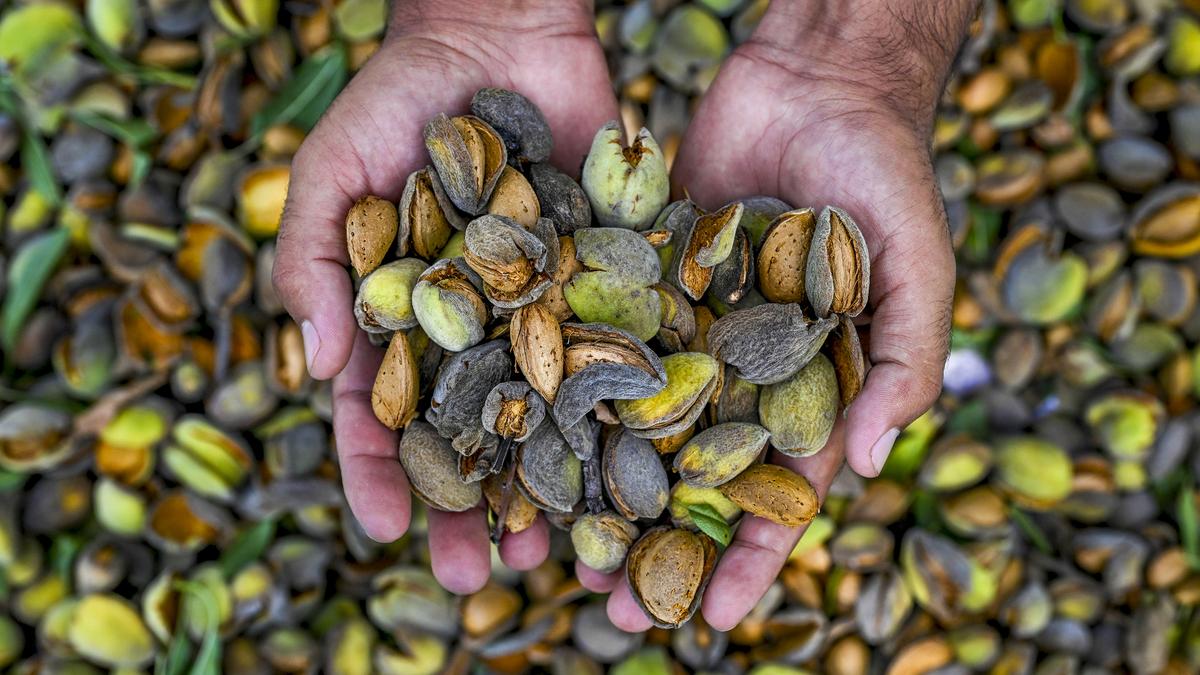
- 24 Aug 2025
In News:
The almond harvest in Kashmir is not only a vital agricultural activity but also a culturally significant seasonal event. This year’s bumper crop has brought relief and optimism to local farmers, reinforcing the economic and social importance of almond cultivation in the region.
About Almonds:
- Almonds are among the oldest and most widely cultivated tree nuts in the world, with two primary types: sweet almonds and bitter almonds.
- They are used extensively in culinary preparations, including sweets, almond milk, and as raw nuts, and are also processed for almond oil.
Climatic and Soil Requirements:
- Climate: Almond trees thrive in colder regions.
- Temperature: Optimal growth occurs between 7°C and 24°C.
- Soil: Deep, loamy, well-drained soils are ideal.
- Rainfall: Requires an average of 75–110 cm of rainfall.
- Altitude: Can grow effectively at 750–3200 meters above sea level.
Global and Indian Context:
- Major producing countries: USA, Australia, Spain, Turkey.
- In India: Almond cultivation is concentrated in hilly and colder regions, primarily in Jammu & Kashmir, Himachal Pradesh, Uttarakhand, with smaller cultivation in Kerala and some hilly areas of Andhra Pradesh.
Economic and Cultural Significance in Kashmir:
- Almond farming provides livelihoods to thousands of farmers in the region.
- The harvest season coincides with local festivals and traditional practices, reinforcing the crop’s cultural relevance.
- This year’s abundant yield has boosted local income and food security.
Primary Amoebic Meningoencephalitis (PAM)
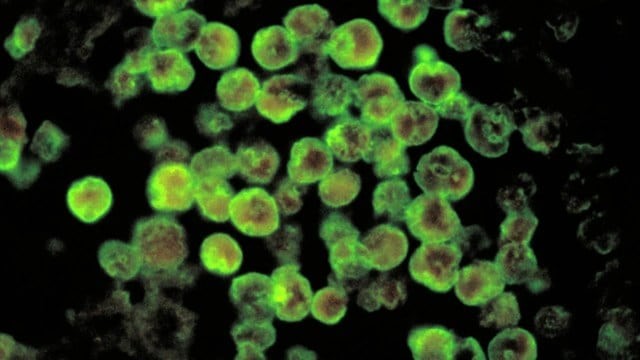
- 24 Aug 2025
In News:
Kerala’s Kozhikode district has reported three recent cases of primary amoebic meningoencephalitis (PAM), including the death of a nine-year-old girl. A three-month-old infant and another child are currently receiving treatment. Following these incidents, the state health department has issued an alert to prevent further infections.
About Primary Amoebic Meningoencephalitis (PAM):
- Definition: PAM is a rare but severe infection of the brain and its protective membranes, caused by the free-living amoeba Naegleria fowleri, popularly called the “brain-eating amoeba.”
- Transmission: The amoeba thrives in warm, fresh water, soil, hot tubs, and improperly maintained swimming pools. Infection occurs when contaminated water enters the nose, allowing the pathogen to reach the brain and meninges. Dust or soil exposure can also serve as potential sources.
- Symptoms: Include headache, fever, nausea, vomiting, sore throat, hallucinations, and neurological deterioration. PAM progresses rapidly, often proving fatal within days.
- Treatment: Early diagnosis and administration of specific antibiotics can sometimes save lives, but recovery is rare. Globally, the disease has a 97% fatality rate, whereas Kerala has reduced it to 25% due to prompt medical interventions and protocols.
Other Amoebic Infections:
- Granulomatous Amebic Encephalitis (GAE): Caused by Acanthamoeba or Balamuthia mandrillaris, GAE progresses more slowly than PAM but is equally deadly if untreated. Unlike PAM, GAE does not necessarily require water exposure for infection.
Epidemiology in Kerala:
- The first PAM case in India was reported in 1971, and Kerala’s first case occurred in 2016. From 2016 to 2023, eight cases were confirmed in the state.
- Last year, Kerala recorded 36 positive cases with nine deaths, prompting the development of the state’s first standard operating procedure (SOP) for managing amoebic meningoencephalitis.
- Notably, in July 2024, a 14-year-old boy in Kozhikode became the first Indian to survive PAM, only the 11th survivor globally.
Factors Contributing to Recent Cases:
- Increased testing for acute encephalitis syndrome (AES).
- Environmental changes, including climate change and pollution.
- Greater awareness and proactive healthcare measures, leading to earlier detection and treatment.
Ionic Liquids
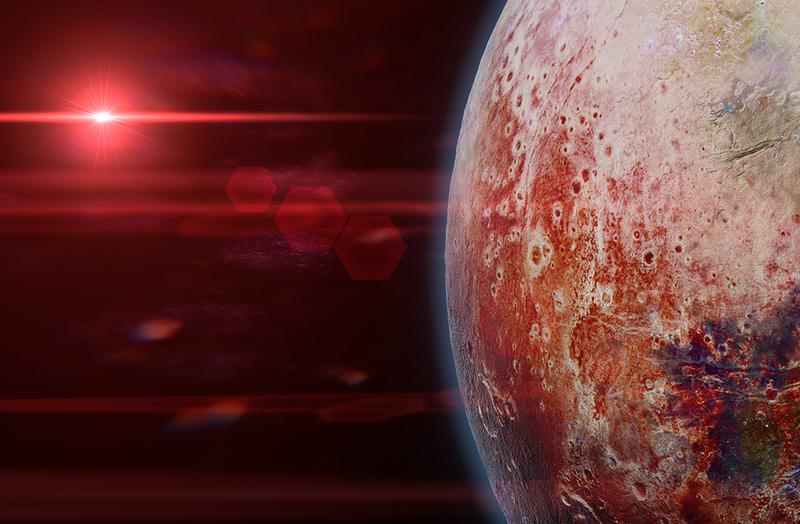
- 24 Aug 2025
In News:
Recent scientific research suggests that life could exist on rocky super-Earths with volcanic activity and minimal water, thanks to ionic liquids (ILs)—salts that remain liquid even in extreme conditions such as a vacuum.
About Ionic Liquids (ILs):
- ILs are salts that are liquid at room temperature, typically with melting points below 100°C.
- Unlike ordinary liquids composed of neutral molecules, ILs are made entirely of ions or short-lived ion pairs.
- Examples include tetrabutylammonium nitrite, 1-(Cyanomethyl)-3-methylimidazolium chloride, and choline acetate.
- ILs are also called liquid electrolytes, ionic melts, ionic fluids, fused salts, liquid salts, or ionic glasses.
Properties and Significance:
- Non-volatile and non-flammable, making them safe under extreme conditions.
- Thermally and chemically stable, resisting decomposition up to 200–400°C depending on composition.
- Can be hydrophobic or hydrophilic, and act as good conductors with a broad electrochemical range.
- Highly tunable: Their physico-chemical properties can be modified by changing the size and type of ions, making them versatile in applications.
Applications in Science and Industry:
- Widely used in synthesis, catalysis, extraction, electrochemistry, analytics, and biotechnology.
- Serve as environmentally friendly alternatives to conventional organic solvents and catalysts.
- Their stability under heat and vacuum conditions allows their use in high-temperature processes.
Role in Supporting Extraterrestrial Life:
- Laboratory experiments demonstrated that ILs can be created by mixing volcanic sulphuric acid with nitrogen-containing organic molecules found on planets.
- These liquids can dissolve biological molecules, offering a medium for biochemical reactions without the need for liquid water.
- This discovery expands the scope of habitable environments beyond Earth-like conditions, suggesting that life could potentially survive on arid, volcanic exoplanets.
SarvottamYudhSeva Medals
- 24 Aug 2025
In News:
On the eve of the 79th Independence Day, President DroupadiMurmu approved the awarding of seven SarvottamYudhSeva Medals (SYSM), the nation’s highest wartime distinguished service honour, to the leaders of Operation Sindoor, marking the first such awards since the Kargil War.
About the SarvottamYudhSeva Medal:
- Institution: 26 June 1980, to recognise distinguished service of the highest order during war, conflict, or hostilities.
- Eligibility: All ranks of the Army, Navy, Air Force, including Territorial Army Units, Auxiliary and Reserve Forces, and lawfully constituted Armed Forces when embodied. Nursing officers and members of the Nursing Services are also eligible. Awards can be given posthumously.
- Design: Circular medal, 35 mm in diameter, gold gilt, with the State Emblem and inscription “SARVOTTAM YUDH SEVA MEDAL” on the obverse, and a five-pointed star on the reverse. The ribbon is golden with a red vertical stripe in the centre. Subsequent awards are recognised by a Bar on the ribbon with a miniature insignia.
- Significance: Considered the wartime equivalent of the Param VishishtSeva Medal (PVSM) for exceptional service in peacetime. Previously awarded to three officers for Kargil War leadership: Lt Gen Amarjit Singh Kalkat, Air Marshal Vinod Patney, and Lt Gen Hari Mohan Khanna.
Escherichia coli
- 24 Aug 2025
In News:
Researchers have recently developed a method to transform genetically engineered Escherichia coli (E. coli) bacteria into self-powered chemical sensors capable of detecting mercury and directly interfacing with electronic devices. This breakthrough represents a significant advancement in environmental monitoring and bioengineering.
About Escherichia coli:
- E. coli is a rod-shaped bacterium belonging to the Enterobacteriaceae family, commonly found in the intestines of humans and animals.
- Most strains are harmless or beneficial, aiding digestion, but certain strains can cause illnesses such as diarrhea, urinary tract infections, respiratory issues, and pneumonia.
- Pathogenic strains, particularly Shiga toxin-producing E. coli (STEC), produce toxins that damage the intestinal lining, leading to symptoms such as fever, persistent diarrhea, bloody stools, and vomiting.
- Transmission occurs through contaminated food, water, or contact with fecal matter from infected individuals or animals.
- Most infections are self-limiting, and treatment primarily focuses on hydration and symptomatic care.
E. coli as a Mercury Sensor:
By leveraging synthetic biology, scientists have reprogrammed E. coli to detect trace amounts of mercury, a highly toxic heavy metal. These bacteria generate an electrical signal when they encounter mercury, allowing direct interfacing with electronic devices to provide real-time monitoring of environmental contamination.
Significance and Applications:
- Provides a low-cost, eco-friendly alternative to conventional mercury detection methods, which often rely on expensive and sophisticated instruments.
- Potential use in monitoring water bodies, industrial effluents, and soil for mercury pollution.
- Demonstrates the broader potential of bioengineered microorganisms in environmental sensing, medical diagnostics, and bio-electronic devices.
This development highlights the convergence of microbiology, synthetic biology, and electronics, paving the way for innovative solutions in pollution monitoring and environmental safety.
Golden Dome Missile Defense Shield
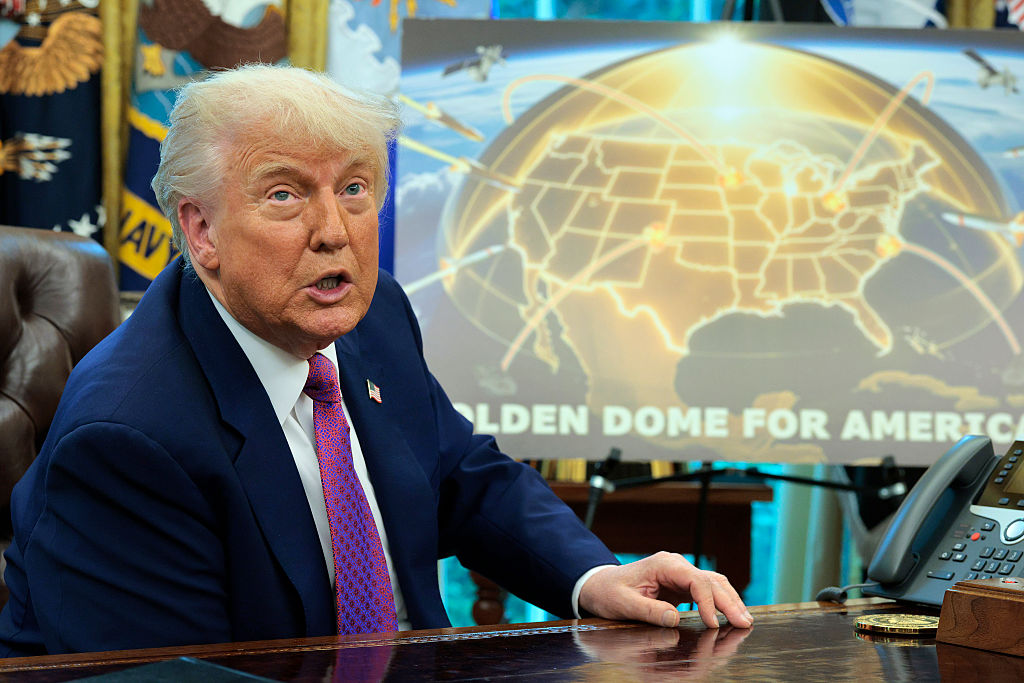
- 23 Aug 2025
In News:
The Golden Dome is a proposed ground- and space-based missile defense system of the United States, announced in 2025 with a projected outlay of $175 billion. It is designed to provide multi-layered protection against intercontinental ballistic missiles (ICBMs), hypersonic weapons, and cruise missiles from adversaries such as China, Russia, Iran, and North Korea.
Objectives
- Establish a comprehensive shield capable of intercepting hostile missiles in their boost, midcourse, and terminal phases.
- Enhance U.S. homeland security through satellite-based early warning, tracking, and interception.
- Integrate existing U.S. missile defense systems into a unified architecture.
Key Features
- Space-Based Layer
- Hundreds of satellites equipped with sensors and interceptors to detect and neutralize missiles soon after launch.
- Incorporation of laser-based systems for mid-flight interception.
- Ground-Based Layers
- Layer 2: Strengthening of the existing Ground-Based Midcourse Defense (GMD) in California and Alaska.
- Layer 3: Five new land-based launch sites (three in continental U.S., two in Hawaii and Alaska) to intercept missiles during their space trajectory.
- Layer 4: “Limited Area Defense” to protect key population centers, using radars, common launchers, and systems like Patriot, THAAD, and Aegis BMD.
- Integration with Existing Systems
- Builds upon existing U.S. missile defense infrastructure to ensure layered and redundant protection.
Comparison with Other Systems
- Israel’s Iron Dome: Golden Dome is often compared to Iron Dome, though the latter is designed for short-range rockets (4–70 km), while Golden Dome targets long-range ballistic and hypersonic threats.
- Reagan’s Strategic Defense Initiative (SDI/“Star Wars”): Golden Dome revives the 1980s concept of space-based defenses, but with advanced modern technology in satellites, sensors, and lasers.
Challenges
- Funding uncertainties: Though an initial $25 billion allocation has been proposed, political hurdles remain.
- Technological feasibility: Space-based interceptors and lasers pose significant challenges in cost, testing, and deployment.
- Strategic implications: Critics argue the system could revive debates on arms races and anti-ballistic missile treaties.
Significance
If realized, the Golden Dome would represent the most ambitious U.S. missile defense program since the Cold War, potentially altering global strategic stability by providing the U.S. with a multi-domain shield against next-generation missile threats.
Sri Lanka–India Naval Exercise (SLINEX-25)
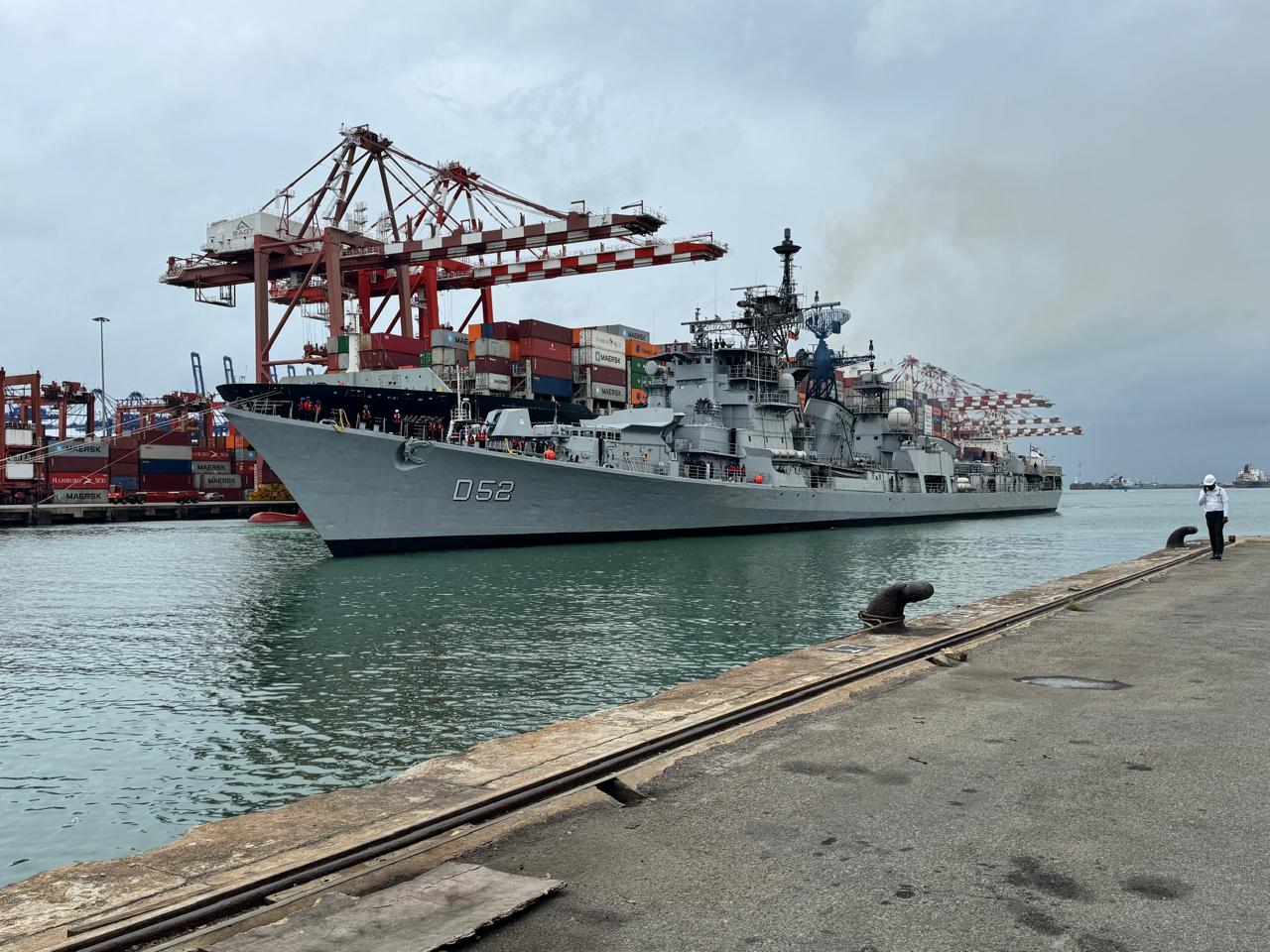
- 23 Aug 2025
In News:
The 12th edition of the Sri Lanka–India Naval Exercise (SLINEX-25)was held recently, marking another milestone in the two-decade-long maritime cooperation between India and Sri Lanka. The exercise underscores India’s commitment to strengthening regional security in line with its vision of MAHASAGAR (Mutual and Holistic Advancement for Security and Growth Across Regions).
Background
- Initiation: Conceptualised in 2005, SLINEX has emerged as a key bilateral exercise, promoting interoperability and mutual trust.
- Previous edition: Conducted at Visakhapatnam, India in December 2024.
Participants
- India: INS Rana (Guided Missile Destroyer) and INS Jyoti (Fleet Tanker).
- Sri Lanka: SLNS Gajabahu and SLNS Vijayabahu (Advanced Offshore Patrol Vessels).
- Special Forces from both navies also took part.
Structure of the Exercise
- Harbour Phase:
- Professional interactions and Subject Matter Expert Exchanges (SMEE).
- Sharing of best practices, cultural and social events, yoga sessions, and sporting activities to strengthen naval camaraderie.
- Sea Phase:Naval drills including gunnery firing, seamanship evolutions, navigation, communication protocols, fueling at sea, and Visit Board Search and Seizure (VBSS) operations.
Significance
- Enhances interoperability between the two navies for multi-faceted maritime operations.
- Facilitates capacity-building and knowledge-sharing in naval tactics.
- Deepens people-to-people and defence diplomacy ties, reinforcing maritime security in the Indian Ocean Region (IOR).
- Complements India’s broader strategic engagement under MAHASAGAR to promote cooperative security and growth in the region.
Pradhan Mantri Viksit Bharat Rozgar Yojana
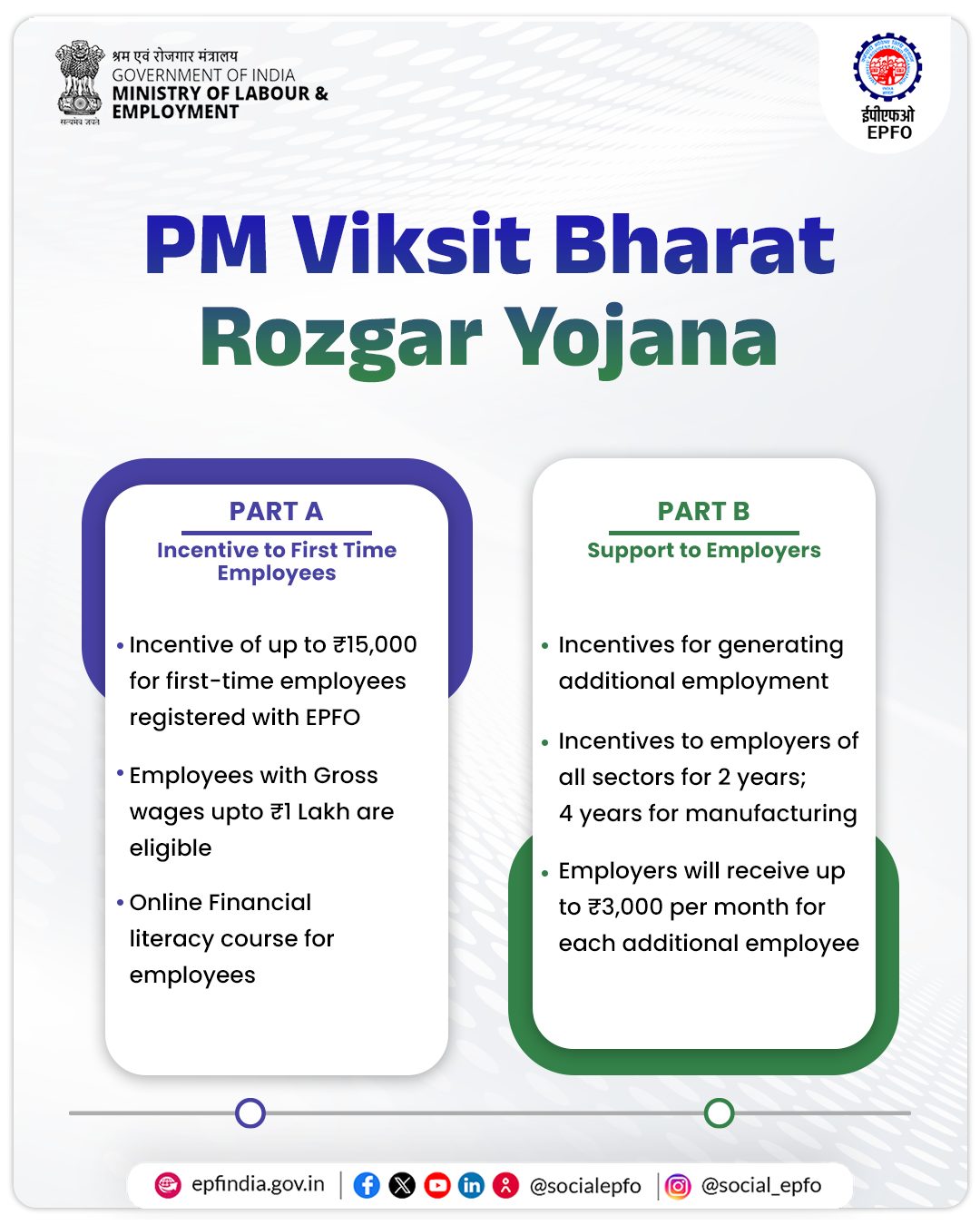
- 23 Aug 2025
In News:
In his 12th Independence Day address from the Red Fort (15 August 2025), Prime Minister Narendra Modi announced the launch of the Pradhan Mantri Viksit Bharat Rozgar Yojana (PMVBRY). With an ambitious financial outlay of nearly ?1 lakh crore, the scheme aims to generate over 3.5 crore jobs in two years, representing a landmark initiative to strengthen the bridge from Swatantra Bharat to Samriddha Bharat through massive employment creation.
Objectives
The scheme seeks to:
- Boost formal job creation by offering direct financial incentives to both employees and employers.
- Promote workforce formalisation by bringing more workers under the ambit of the Employees’ Provident Fund Organisation (EPFO).
- Encourage savings and financial literacy among youth entering the workforce for the first time.
- Catalyse employment growth in the manufacturing sector, a critical pillar of Make in India and Atmanirbhar Bharat.
Key Features of the Scheme
Part A – Support to First-Time Employees
- Targets first-time employees registered with EPFO.
- Provides one month’s EPF wage support up to ?15,000, disbursed in two instalments:
- First instalment after 6 months of continuous service.
- Second instalment after 12 months, subject to completion of a financial literacy programme.
- Incentive is partly locked in a savings/deposit account to encourage long-term financial discipline.
- Employees earning up to ?1 lakh per month are eligible.
- Expected to benefit 1.92 crore first-time employees.
Part B – Incentives for Employers
- Employers will be incentivised to create additional formal jobs, with a focus on manufacturing.
- Incentive: up to ?3,000 per employee per month for two years, provided the employment is sustained for at least six months.
- For the manufacturing sector, support will extend to the 3rd and 4th year as well.
- Expected to facilitate the creation of 2.6 crore jobs.
Incentive Payment Mechanism
- Payments to employees under Part A will be made via Direct Benefit Transfer (DBT) using the Aadhaar Bridge Payment System (ABPS).
- Payments to employers under Part B will be credited directly into PAN-linked accounts.
e-Sushrut@Clinic
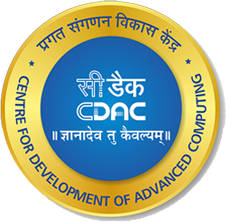
- 23 Aug 2025
In News:
- India’s healthcare system is undergoing rapid digital transformation under the Ayushman Bharat Digital Mission (ABDM), launched in 2021 to build an integrated digital health infrastructure.
- In this context, the National Health Authority (NHA) and the Centre for Development of Advanced Computing (C-DAC) have signed an MoU to roll out e-Sushrut@Clinic—a lightweight, government-backed Hospital Management Information System (HMIS).
- Designed specifically for small and medium healthcare providers, this initiative seeks to bridge the digital divide, enhance interoperability, and empower clinics with affordable, secure, and efficient digital solutions.
Need for a Digital HMIS for Small Providers
- The demand for a trustworthy and affordable HMIS has been persistent, especially among small clinics and medium hospitals that face resource constraints.
- Feedback from ABDM microsites revealed the challenges of adopting costly and fragmented private solutions. While large hospitals like AIIMS have already benefitted from C-DAC’s flagship e-Sushrut HMIS—currently operational in 17 AIIMS and over 4,000 health facilities—a simplified version was needed for smaller stakeholders.
- By addressing these gaps, e-Sushrut@Clinic provides a low-cost, easy-to-adopt, and ABDM-enabled platform that ensures inclusivity in India’s digital health journey.
Features of e-Sushrut@Clinic
- Lightweight Cloud-Based System: Tailored for outpatient management, with pharmacy and nursing modules.
- Ease of Onboarding: Providers can register using the Health Facility Registry (HFR) and Health Professionals Registry (HPR). Even unregistered facilities can directly sign up on the platform.
- Comprehensive Utilities: Facilitates patient record digitization, prescriptions, billing, and telemedicine with minimal technical burden.
- Integration with ABDM Tools: Enables interoperability across the health ecosystem.
- Clinical Decision Support Systems (CDSS): Offers free AIIMS-developed modules for hypertension and diabetes, supporting doctors in evidence-based diagnosis and treatment.
- Patient-Centric Benefits: Enhances efficiency, data security, and patient satisfaction through transparent and reliable digital care.
Significance for Healthcare Delivery
- For Providers – Simplifies administrative processes, reduces paperwork, and improves continuity of care.
- For Patients – Facilitates secure access to health records, better treatment planning, and telemedicine consultations.
- For the System – Creates a standardised, interoperable, and government-backed HMIS that strengthens trust and accelerates the adoption of ABDM.
By reducing barriers to digital adoption, this initiative will benefit tens of thousands of doctors and facility managers nationwide.
Contribution to ABDM and Digital India
- e-Sushrut@Clinic is a pivotal step in expanding the ABDM ecosystem, which aims to create a digital health highway connecting patients, providers, and policymakers. Its low per-user cost ensures affordability, while government backing guarantees credibility.
- The platform complements other digital health initiatives by promoting transparency, efficiency, and interoperability.
- Moreover, it aligns with the Digital India mission, ensuring that even small clinics in rural and semi-urban areas can be integrated into the national digital health infrastructure.
Online Gaming Bill, 2025

- 23 Aug 2025
In News:
- The Promotion and Regulation of Online Gaming Bill, 2025, passed by Parliament, represents a landmark intervention in India’s digital policy.
- It seeks to prohibit exploitative online money games while simultaneously promoting e-sports and safe online social games.
- The legislation balances the twin objectives of protecting citizens, especially the middle class and youth, from financial and psychological harm and leveraging the potential of the online gaming industry as a driver of innovation, employment, and global competitiveness.
Rationale for the Bill
- The rapid proliferation of online money gaming platforms has led to addiction, financial ruin, fraud, and even suicides.
- The World Health Organization has classified “gaming disorder” as a health condition, reinforcing the urgency of regulation. According to government estimates, 45 crore people were adversely impacted, with losses exceeding ?20,000 crore.
- These platforms also posed risks of money laundering, terror financing, and cybercrime, exploiting loopholes in existing laws. With most operators based offshore, regulatory gaps persisted. Therefore, the Bill provides a comprehensive legal framework that integrates social protection with sectoral growth.
Understanding the Online Gaming Sector
- E-Sports – Organised competitive digital sports that foster strategy, teamwork, and discipline.
- Online Social Games – Recreational, skill-based, and educational games designed for safe entertainment and learning.
- Online Money Games – Games involving financial stakes, often associated with addiction, fraud, and economic distress.
The Bill encourages the first two categories while imposing a blanket ban on money games.
Key Provisions of the Bill
- Applicability: Extends to all of India, including offshore platforms offering services within India.
- Promotion of E-Sports: Recognised as a legitimate sport; guidelines to be framed by the Ministry of Youth Affairs and Sports, with support for training academies and tournaments.
- Encouragement of Social/Educational Games: Central Government to register safe games and develop platforms for digital literacy and skill-building.
- Ban on Online Money Games: Prohibition on offering, advertising, or facilitating such games; banks barred from processing related transactions.
- Online Gaming Authority: A national regulator to classify games, enforce compliance, and address grievances.
- Penalties: Up to 3 years imprisonment and ?1 crore fine for violations; harsher penalties for repeat offenders.
- Corporate Liability: Companies and responsible officers held accountable, with protection for independent directors.
- Investigative Powers: Authorised officers may search, seize, and arrest under the Bharatiya Nagarik Suraksha Sanhita, 2023.
Complementary Legal Measures
- IT Act, 2000 and Intermediary Rules, 2021 – Empower government to block illegal platforms; 1,524 sites already blocked.
- Bharatiya Nyaya Sanhita, 2023 – Criminalises betting and unlawful economic activities.
- GST Act, 2017 – Extends taxation compliance to offshore gaming platforms.
- Consumer Protection Act, 2019 – Prohibits misleading advertisements; celebrities warned against endorsing betting apps.
- Advisories and Education Guidelines – Awareness campaigns on safe gaming for parents, teachers, and youth.
Societal Benefits
- Consumer Protection: Shields families from predatory gaming platforms.
- Youth Empowerment: Expands avenues for e-sports careers and skill-based learning.
- Digital Economy Growth: Positions India as a global gaming hub, driving innovation, exports, and jobs.
- National Security: Prevents misuse of platforms for illicit financing or propaganda.
- Global Leadership: Establishes India as a model for responsible digital regulation.
Conclusion
The Promotion and Regulation of Online Gaming Bill, 2025 reflects India’s attempt to balance innovation with responsibility. By banning harmful money games while nurturing e-sports and educational platforms, the Bill not only safeguards citizens but also unlocks opportunities in the digital economy. It exemplifies a preventive yet progressive regulatory approach, aligning national security, youth welfare, and economic growth. Ultimately, it ensures that technology remains a tool for empowerment, not exploitation.
Indian Ports Bill, 2025
- 22 Aug 2025
In News:
The passage of the Indian Ports Bill, 2025 in both Houses of Parliament marks a landmark reform in India’s maritime governance. The new legislation replaces the colonial-era Indian Ports Act, 1908, bringing in a modern, transparent, and sustainability-driven framework for port development and operations.
Why the Reform was needed
- The 1908 Act, framed under colonial administration, had become outdated in the context of globalised trade, containerisation, and environmental challenges.
- India’s expanding maritime ambitions under the SagarmalaProgramme and Maritime India Vision 2030 required a contemporary law aligned with international standards.
- The reform is also tied to India’s long-term goal of becoming a leading maritime nation by 2047.
Key Objectives of the Bill
- Replace archaic colonial rules with a forward-looking framework.
- Strengthen cooperative federalism through Centre–State partnership in port governance.
- Promote ease of doing business with digitalised and simplified procedures.
- Encourage investment, including PPPs and FDI, by providing regulatory clarity.
- Standardise safety, security, and operational protocols across ports.
- Advance sustainability through green and smart port development.
Major Provisions
1. Institutional Reforms
- Maritime State Development Council (MSDC): A central–state body for coordinated planning, policy harmonisation, and dispute resolution.
- State Maritime Boards: Strengthened to manage non-major ports and oversee expansion/modernisation projects.
- Dispute Resolution Committees: Fast-track mechanisms for sectoral disputes among ports, operators, and users.
2. Operational Reforms
- Tariff Autonomy: Ports empowered to set competitive tariffs under transparent guidelines.
- Integrated Planning: Long-term strategies for cargo handling, multimodal logistics, and coastal shipping.
- Digitalisation: Introduction of the Maritime Single Window, e-clearances, and real-time vessel tracking to cut delays.
- Boost to Coastal & Inland Waterways: Greater connectivity with rail, road, and riverine transport.
3. Environmental & Safety Measures
- Mandatory Waste Reception Facilities and Ballast Water Management systems.
- Compliance with MARPOL (International Convention for the Prevention of Pollution from Ships).
- Emergency Preparedness Plans for accidents, natural disasters, and security threats.
- Promotion of renewable energy, electrification, and shore power systems to cut emissions.
Significance of the Bill
- Economic Growth: Ports as engines of trade, logistics, and job creation.
- Global Alignment: Brings India’s port governance on par with leading maritime nations.
- Sustainability: Push for eco-friendly, digitally enabled, and climate-resilient ports.
- Cooperative Federalism: Greater state participation ensures balanced and region-specific development.
The Bigger Picture
By integrating institutional, operational, and environmental reforms, the Indian Ports Bill, 2025 seeks to transform Indian ports into world-class hubs of trade and logistics. It not only aligns with global best practices but also supports the Prime Minister’s vision of “Ports for Prosperity”, contributing to India’s emergence as a maritime power by 2047.
First removable Solar Panel System between tracks
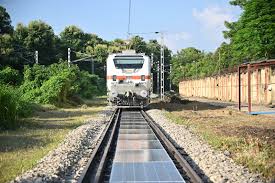
- 22 Aug 2025
In News:
Indian Railways has taken a major step towards achieving its net-zero carbon emission target by 2030 with the commissioning of India’s first removable solar panel system between railway tracks at Banaras Locomotive Works (BLW), Varanasi in August 2025.
About the Project
- Length of Installation: 70 metres
- Number of Panels: 28 removable panels
- Capacity: 15 KWp (Power density: 240 KWp/km; Energy density: 960 units/km/day)
- Special Feature: Panels are removable, enabling easy maintenance, emergency clearance, and seasonal adaptation.
- Design: Indigenously developed to be installed between tracks without disrupting rail traffic.
Technical Specifications of Panels
- Dimensions: 2278 mm × 1133 mm × 30 mm
- Weight: 31.83 kg per panel
- Type: 144 half-cut mono crystalline PERC bifacial collar cells (multi-bus bar)
- Efficiency: 20.15%
- Maximum Voltage: 1500V; Open Circuit Voltage (Voc): 49.71V
Significance
- Green Energy Transition: Promotes sustainable transport by reducing dependency on fossil fuels and cutting carbon footprint.
- Innovative Space Utilisation: Uses the space between tracks, avoiding land acquisition. Potential estimated at 3.5 lakh units/year/km of track. With IR’s 1.2 lakh km track length, the scalability is massive.
- Economic Efficiency: Supports auxiliary energy needs of railway units, lowering operational costs.
- Replicability: Being a pilot project, it serves as a model for adoption across Indian Railways.
Other Recent Railway Developments
- Green Logistics: In August 2025, the first salt-loaded freight rake from Sanosara (Bhuj–Naliya section) to Dahej carried 3,851.2 tonnes of industrial salt over 673.57 km, generating ?31.69 lakh in freight revenue. This initiative boosts regional industry and expands rail freight solutions.
- Electrification Innovation: Western Railway commissioned the country’s first 2×25 kV Electric Traction System at the Nagda–Khachrod section (Ratlam Division). Powered by two Scott-connected 100 MVA transformers, it enhances efficiency in overhead equipment (OHE) supply, marking a leap in electrification infrastructure.
Broader Context
- Indian Railways is rapidly expanding its solar adoption strategy, aligning with the National Solar Mission and Sustainable Development Goal (SDG-7: Affordable and Clean Energy).
- This innovation aligns with India’s climate commitments under the Paris Agreement and helps advance the country’s energy transition pathway.
Water-Scarce Districts in India
- 22 Aug 2025
In News:
Water, being a State subject, places the responsibility for augmentation, conservation, and efficient management primarily on State Governments. However, the Central Government supplements efforts through technical and financial support. Recent assessments by the Central Ground Water Board (CGWB) highlight the growing challenge of water scarcity in India.
Water-Scarce Districts in India
- The “National Compilation of Dynamic Ground Water Resources of India, 2024” jointly prepared by CGWB and State Governments, categorises districts based on groundwater status.
- Classification:
- Over-exploited: 102 districts
- Critical: 22 districts
- Semi-critical: 69 districts
- Total water-stressed districts:193
- Causes of Stress: Over-extraction for agriculture, rapid urbanisation, industrial demand, erratic monsoons, and climate variability.
- Geographic Spread: Punjab, Haryana, Rajasthan, Tamil Nadu, and Karnataka are among the most affected.
Government Initiatives
1. Jal Shakti Abhiyan (JSA) – 2019 onwards
- A mission-mode campaign for water conservation in 256 water-stressed districts.
- Scaled up nationwide with the tagline: “Catch the Rain – Where it Falls, When it Falls.”
2. Thematic Focus under JSA: Catch the Rain (CTR)
- 2023 – Source Sustainability for Drinking Water: Focused on 150 districts identified by Jal Jeevan Mission.
- 2024 – Nari Shakti se Jal Shakti: Focused on 151 districts identified by CGWB, highlighting women’s role in water management.
- 2025 – Jal Sanchay Jan Bhagidari: Focused on 148 districts, emphasising community participation, inter-sectoral convergence, and innovative financing.
3. Institutional Mechanism
- Central Teams: Comprising Central Nodal Officers (Additional Secretary/Joint Secretary level) and Technical Officers from agencies like CWC, CGWB, NIH, CSMRS, CWPRS, etc., for field monitoring and technical support.
- State Nodal Officers: Oversee campaign execution at state level.
- 148 Central Nodal Officers appointed for high-focus districts in JSA: CTR 2025–26.
Significance of Water Scarcity Data
- Drinking Water Security: Ensures reliable access in rural and urban areas.
- Climate Adaptation: Builds resilience against droughts and erratic rainfall.
- Policy Planning: Provides evidence for programmes such as Jal Jeevan Mission, Atal Bhujal Yojana, and achieving SDG 6 (Clean Water and Sanitation).
- Public Awareness & Participation: Encourages community-led water conservation for sustainable outcomes.
State of Food Security and Nutrition in the World 2025
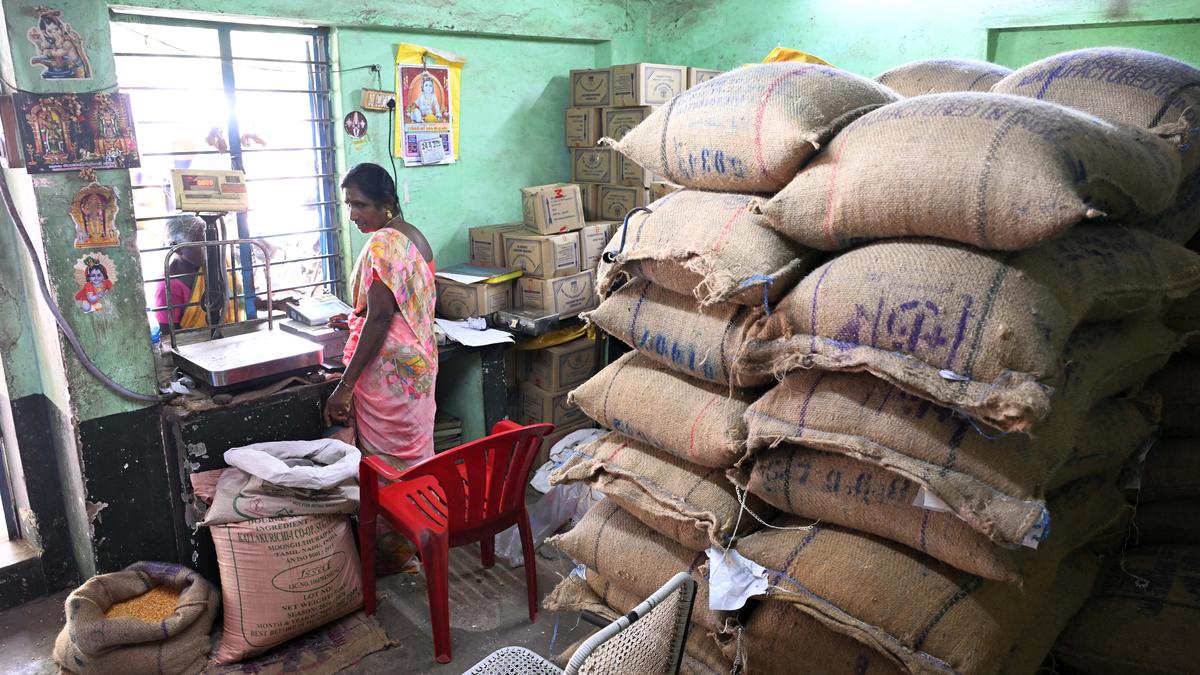
- 22 Aug 2025
In News:
According to the UN’s “State of Food Security and Nutrition in the World 2025”, global undernourishment decreased to 8.2% (673 million individuals) in 2024, down from 8.5% in 2023.
India has been instrumental in this turnaround—its prevalence of undernourishment fell from 14.3% (2020–22) to 12% (2022–24), equating to 30 million fewer hungry people. These outcomes underscore India’s unique role in advancing SDG 2: Zero Hunger globally.
Defining Hunger: Layers and Causes
- Undernourishment: Insufficient calorie intake.
- Malnutrition: Poor diet quality lacking protein and essential micronutrients.
- Hidden Hunger: Micronutrient deficiencies (iron, iodine, vitamin A, zinc).
Root Causes:
- Economic barriers: Poverty limits access to nutritious food (NITI Aayog Index: ~11.3% multidimensionally poor).
- Agricultural inefficiencies: Fragmented holdings, climate variability, poor irrigation, and 13% post-harvest losses.
- High food costs: A nutritious diet remains unaffordable for over 60% of Indians.
- Weak infrastructure: Poor cold storage and logistics aggravate food wastage.
- Health and sanitation challenges: NFHS-5 (2019–21): 35.5% of children under five are stunted; 19.3% are wasted.
- Macro-disruptions: Global conflicts, pandemics, and climate shocks affect food systems, impacting India too.
India’s Strategic Interventions: From Policies to Systems
- Public Distribution System (PDS) Reforms
- Extensive digital overhaul: Aadhaar-based targeting, biometric authentication, real-time inventory tracking, and ONORC (One Nation One Ration Card) ensuring portability and inclusion for migrants and the vulnerable.
- Served over 800 million beneficiaries during COVID-19—a monumental welfare scaling.
- Emphasis on Nutrition Over Mere Calories
- Continued unaffordability of healthy diets (60%+ can’t afford) due to price inflation and weak linkages.
- Nutrition-centric interventions:
- PM POSHAN (2021): Expanded mid-day meals into nutrition-sensitive programs.
- ICDS & POSHAN Abhiyaan: Enhanced focus on dietary diversity and maternal-child health.
- AnaemiaMukt Bharat: Tackles widespread anaemia among women and children.
- Agrifood System Transformation
- Promote nutrient-dense food affordability (pulses, fruits, vegetables, animal-source proteins).
- Address 13% food loss via upgraded cold-chain infrastructure and logistics.
- Support women-led enterprises and FPOs, especially in climate-resilient, biofortified crop cultivation.
- Digital Innovations in Agriculture: Tools such as AgriStack, e-NAM, and geospatial platforms enhance market access, planning, and transparency.
Strategies for Sustainable Impact
|
Strategy |
Actions |
|
Nutrition-centric policy shift |
Fortify staples, subsidise nutrient-rich foods (pulses, eggs, milk) |
|
Infrastructure strengthening |
Upgrade cold storage, logistics, and digital post-harvest systems |
|
Inclusive economy |
Scale women-led food enterprises, FPOs, and biofortified crop cultivation |
|
Digital expansion |
Broaden use of AgriStack, e-NAM, geospatial tools for planning & targeting |
|
Urban nutrition resilience |
Launch community kitchens, food banks, awareness drives |
|
Global sharing & leadership |
Replicate ONORC, PDS digitalisation, nutrition models in the Global South |
Overseas Citizens of India (OCI) Scheme
- 22 Aug 2025
In News:
The Ministry of Home Affairs has announced new rules for overseas citizens of India that may impact their future registration or cancellation.
Background
The Overseas Citizens of India (OCI) Scheme was launched in 2005 by the Ministry of Home Affairs (MHA) to strengthen India’s engagement with its diaspora. It provides certain residency, travel, and economic benefits to foreign nationals of Indian origin, while keeping intact India’s constitutional restrictions on dual citizenship.
Key Features of OCI
- Eligibility:
- Persons who were citizens of India on or after 26 January 1950, or their children/grandchildren/great-grandchildren.
- Excludes individuals who have ever been citizens of Pakistan or Bangladesh, and their descendants.
- Benefits:
- Visa-free travel: Lifelong, multiple-entry, multi-purpose visa to India.
- Economic & Educational Rights: Can pursue education, invest in India, and purchase property (except agricultural/plantation land).
- Ease of Residency: Long-term residency without repeated visa applications.
- Restrictions:
- No political rights (cannot vote, contest elections, or hold constitutional posts).
- No ownership of agricultural or plantation land.
New Rules Notified by MHA (2025)
The government has tightened the regulatory framework around OCI registration by amending rules under the Citizenship Act, 1955 (Section 7D).
Fresh Grounds for Cancellation
- Conviction-based: If an OCI cardholder is sentenced to imprisonment for two years or more.
- Charge-sheet-based: If charge-sheeted for an offence punishable with seven years or more.
- Applicability: These provisions apply irrespective of where the conviction or charge-sheet occurs (India or abroad), provided the offence is recognised under Indian law.
Existing Grounds (already under law)
An OCI card can also be cancelled if the person:
- Obtained registration through fraud, misrepresentation, or concealment of facts.
- Has shown disaffection towards the Indian Constitution.
- Has engaged in unlawful trade or communication with an enemy during war.
- Acts against the sovereignty, integrity, security of India, or its friendly relations with other countries/public interest.
- Within five years of registration, is sentenced to imprisonment for two years or more.
Significance of the Amendment
- Strengthens legal accountability of OCI cardholders.
- Ensures parity of standards between domestic and overseas citizens regarding serious offences.
- Reinforces national security and constitutional safeguards while maintaining diaspora ties.
Antitrisuloides catocalina
- 21 Aug 2025
In News:
Scientists have recently recorded the presence of the rare moth species Antitrisuloides catocalina at the Choolannur Peafowl Sanctuary in Palakkad district, Kerala, marking its first documented occurrence in the Western Ghats.
About Antitrisuloides catocalina
- Belongs to the Noctuidae family and genus Antitrisuloides, which has only two known species worldwide.
- It is a rare nocturnal moth, earlier reported only from Northeast India.
- The specimen identified in Kerala has been confirmed as the subspecies Antitrisuloides catocalina cyclica.
- Its discovery extends the known range of the species and highlights the hidden diversity of moth fauna in the Western Ghats.
About Choolannur Peafowl Sanctuary
- Popularly known as Mayiladumpara.
- Located in Palakkad district, Kerala.
- Established in 1996, it is the only peacock sanctuary in Kerala and the first of its kind in India.
- Dedicated exclusively to the breeding and conservation of peafowls.
- Named in memory of K.K. Neelakantan (Induchoodan), renowned ornithologist and nature writer, who hailed from the nearby village of Kavassery.
Significance of the Discovery
- Expands the documented geographical distribution of A. catocalina.
- Reinforces the role of the Western Ghats as a biodiversity hotspot with high levels of endemism and undocumented species.
- Highlights the importance of systematic surveys in lesser-studied taxa like moths, which can act as indicators of ecosystem health.
Damselfly Species
- 21 Aug 2025
In News:
Researchers have discovered two new species of damselflies in the Western Ghats—Konkan Shadowdamsel from Maharashtra’s Sindhudurg district and Crimson Shadowdamsel (Protosticta sanguinithorax) from Kerala’s Thiruvananthapuram district. The findings were published in the international journal Zootaxa.
About the New Species
- Group: Both belong to the genus Protosticta, commonly called Shadowdamsels, which prefer shaded forest habitats and pristine streams.
- Physical Traits:
- Crimson Shadowdamsel → reddish body.
- Konkan Shadowdamsel → coffee-brown ground colouration.
- Previously, these were mistaken for the Red-spot Shadowdamsel (Protosticta sanguinostigma), described over a century ago from the Nilgiris, which is jet black in colour.
- Identification: Differentiation was confirmed using high-resolution microscopy and molecular analysis of the COI gene, a standard marker for species classification.
- Distribution: Both species are endemics with very restricted microhabitats in the Western Ghats, often outside protected areas.
Ecological Importance
- Shadowdamsels are considered bioindicators:
- Found only in pristine forests with good canopy cover and unpolluted streams.
- Their presence reflects the ecological health of habitats.
- Many species are microendemics, restricted to small hill ranges, making them highly vulnerable to habitat disturbance.
- Current threats include expansion of plantations, deforestation of shade trees, and loss of natural streams.
Damselflies: A Brief Overview
- Belong to the order Odonata, along with dragonflies.
- Characteristics: slender body, delicate net-veined wings, weak flight.
- Habitat: shallow freshwater ecosystems.
- Difference from dragonflies: generally smaller, more fragile, and weaker fliers.
APAAR ID
- 21 Aug 2025
In News:
The Central Board of Secondary Education (CBSE) has made it mandatory for students to submit their APAAR ID during board exam registration, beginning with the 2026 board examinations. This marks a major step in integrating India’s education system under the Digital Public Infrastructure for Education (DPIE).
What is APAAR ID?
- Full Form: Automated Permanent Academic Account Registry.
- Origin: Envisioned under the National Education Policy (NEP), 2020.
- Nature: A unique, permanent 12-digit identification number assigned to every student from pre-primary to higher education.
- Function: Tracks a student’s entire academic journey, consolidating degrees, report cards, scholarships, awards, and credits.
- Integration:
- Linked to Aadhaar for authentication.
- Records stored in DigiLocker for easy and secure access.
- Generated through the Unified District Information System for Education Plus (UDISE+).
- Vision: Embodies the principle of “One Nation, One Student ID”, serving as a lifelong academic passport.
Objectives of APAAR
- Unified Academic Record – Create a lifelong, universally accessible digital database of academic achievements.
- Seamless Transfers – Facilitate smooth migration of students across schools and institutions.
- Transparency & Verification – Eliminate fake certificates and duplication through verifiable digital records.
- Policy Support – Aid educational policymaking and data-driven governance by maintaining standardized records.
- Student Empowerment – Provide students easy access to academic documents via DigiLocker.
Why is CBSE Making APAAR Mandatory?
- Until now, CBSE schools submitted student lists for Class 10 and 12 exams with registration details in Classes 9 and 11.
- There was no standardised identity system, causing inconsistencies and lack of verifiability.
- Linking APAAR ID with registration ensures accuracy, transparency, and elimination of duplication in student records.
- The Ministry of Education has mandated APAAR adoption as part of DPIE for improved data management and transparency.
Concerns and Safeguards
- Concerns Raised: Parents have expressed fears of misuse of personal data and privacy breaches.
- Government’s Assurance: Information will only be accessible to authorized educational entities—such as UDISE+, scholarship agencies, recruitment boards, and institutions—and strictly for academic purposes.
Significance
- APAAR will transform academic governance by creating a single, verifiable, lifelong academic identity.
- It will help students, institutions, and policymakers by streamlining record-keeping, enabling mobility, and ensuring trust in credentials.
- In the long term, it could become the backbone of India’s digital education ecosystem, aligned with NEP 2020’s vision of inclusivity, efficiency, and accountability.
RBI has released a report on the FREE-AI
- 21 Aug 2025
In News:
The Reserve Bank of India (RBI) has released the Framework for Responsible and Ethical Enablement of Artificial Intelligence (FREE-AI) Committee Report, marking a major step in shaping ethical, transparent, and sustainable AI adoption in India’s financial sector. The framework seeks to balance innovation with risk mitigation, ensuring that the transformative power of AI is harnessed without compromising trust, fairness, or safety.
RBI’s 7 Sutras for Responsible AI in Finance
The FREE-AI framework is built on seven guiding principles (Sutras):
- Trust is the Foundation – AI must be reliable, transparent, and inspire public confidence.
- People First – AI should empower human decision-making while safeguarding dignity, inclusion, and citizen interest.
- Innovation over Restraint – Encourage responsible innovation without excessive restrictions.
- Fairness and Equity – AI outcomes must be unbiased and equitable.
- Accountability – Responsibility for AI decisions rests with deploying entities, with clear lines of answerability.
- Understandable by Design – Systems must be interpretable and explainable to users, auditors, and regulators.
- Safety, Resilience, and Sustainability – AI must be secure, adaptable, and capable of delivering long-term benefits.
India’s Policy Developments
- MuleHunter AI – Developed by RBI Innovation Hub to detect mule accounts and curb digital frauds.
- Digital Lending Rules – Mandate auditable AI-driven credit assessments with human oversight and grievance redressal.
- SEBI’s 2025 Guidelines – Propose responsible AI use in Indian securities markets.
- IndiaAI Mission – Aims to boost AI innovation, research, and computational infrastructure.
RBI’s Recommendations under FREE-AI
The Committee laid down 26 recommendations across six pillars:
- Infrastructure – Establish high-quality financial data infrastructure, integrated with AI Kosh.
- Innovation Enablement – Create an AI Innovation Sandbox for testing models with anonymised data, ensuring compliance with AML, KYC, and consumer protection norms.
- Consumer Protection & Security – Periodic AI red-teaming, incident reporting frameworks, and good-faith disclosures.
- Capacity Building – Structured AI governance training at all institutional levels; knowledge sharing across REs (regulated entities).
- Governance – Oversight frameworks ensuring accountability and transparency in AI deployments.
- Assurance Mechanisms – Standards and audit processes for AI-based systems.
Higher Education Commission of India (HECI)
- 21 Aug 2025
In News:
India’s higher education system is poised for its most significant transformation since independence with the establishment of the Higher Education Commission of India (HECI), a unified regulatory body that will replace the fragmented oversight of University Grants Commission (UGC), All India Council for Technical Education (AICTE), and National Council for Teacher Education (NCTE).
Background & Genesis
- The HECI is a proposed unified regulator intended to replace the existing oversight bodies: UGC, AICTE, and NCTE—tasked with regulating non-technical, technical, and teacher-education domains respectively.
- The concept originates from NEP 2020, which advocates for a "light but tight" regulatory framework governed by one umbrella institution with four independent verticals.
- Originally floated in a 2018 draft bill, the idea regained momentum in 2021 and is currently under drafting, with status updates as recent as July–August 2025.
Objectives & Rationale
- Streamline governance: HECI aims to eliminate overlapping jurisdictions, reduce bureaucratic delays, and improve accountability across higher education institutions.
- Enhance autonomy and innovation: Under NEP 2020’s vision, it seeks to foster institutional independence coupled with data-driven oversight.
- Align with global best practices: The vertical structure (regulation, accreditation, funding, standards) mirrors international examples like the UK's Office for Students and Australia’s TEQSA.
Structural Framework: Four Vertical Councils
As per NEP 2020, HECI will function through four independent verticals:
- National Higher Education Regulatory Council (NHERC): Responsible for regulatory oversight, excluding medical and legal education.
- National Accreditation Council (NAC): Acts as a meta-accrediting body, setting phased benchmarks and ensuring quality across institutions.
- Higher Education Grants Council (HEGC): Will manage funding based on transparent, performance-linked criteria, replacing UGC’s funding role.
- General Education Council (GEC): Tasked with developing the National Higher Education Qualification Framework (NHEQF), defining graduate learning outcomes. It will subsume the NCTE and liaise with other professional standard-setting bodies.
Some sources also mention integration of accreditation entities such as NAAC and NBA into HECI’s accreditation wing, adopting peer-review models.
Legislative Journey & Current Status
- The HECI bill is being prepared following NEP 2020, specifically underwritten by Minister Sukanta Majumdar in July 2025. A Cabinet note is anticipated before formal introduction.
- Finalisation is pending, with no clear date as of mid-2025.
Expected Benefits
- Simplified administration—one regulator instead of multiple authorities.
- Improved transparency and efficiency, eliminating redundancy.
- Promoting global standards, quality enhancements, and integration of interdisciplinary and digital learning.
Gaur
- 20 Aug 2025
In News:
The Palamau Tiger Reserve (PTR), the last stronghold of the Gaur (Bos gaurus) in Jharkhand, has reported an alarming decline in population. Once spread across Saranda, Dalma, Hazaribagh, Gumla, and other forests of the state, Gaurs are now restricted to small and isolated groups in PTR’s northern range.
About Gaur
- Common name: Indian Bison
- Family: Bovidae; largest species of wild cattle.
- Distribution: Native to South and Southeast Asia.
- Preferred habitat:
- Evergreen, semi-evergreen, and moist deciduous forests with grasslands.
- Hilly terrains below 1,500–1,800 m with large, undisturbed forests and reliable water sources.
Conservation Status
- IUCN Red List: Vulnerable
- CITES: Appendix I
- Wildlife Protection Act, 1972: Schedule I
Population Trends in PTR
- 1970s population: ~150
- Recent study: Only 68 individuals remain.
- Demography: Slightly female-biased sex ratio (1:1.32), but very low numbers of juveniles and calves indicate poor recovery.
Ecological Significance
- Important prey species for large predators such as tigers and leopards.
- Herbivory: Helps regulate vegetation dynamics.
- Seed dispersal: Contributes to forest regeneration and ecosystem balance.
Causes of Decline
- Habitat degradation & fragmentation due to human activity.
- Anthropogenic pressures: Rising livestock populations (approx. 1.5 lakh around Betla region).
- Disease transmission from domestic cattle (e.g., foot-and-mouth disease, rinderpest).
- Genetic bottlenecks due to small and isolated herds.
Recovery Efforts in PTR
- Action Plan: “Ecology and Recovery Plan of Gaur in PTR” prepared after two years of research.
- Habitat improvement: Grassland expanded from 190 ha to 400 ha; waterholes secured.
- Security: 40 anti-poaching camps with round-the-clock staff.
- Technology: Use of GPS and modern monitoring systems.
- Disease control: Large-scale livestock vaccination programmes to reduce risks.
- Genetic infusion: Proposal to introduce Gaurs from Kanha Tiger Reserve (Madhya Pradesh) to improve genetic diversity.
About Palamau Tiger Reserve
- Location: Chota Nagpur Plateau, Jharkhand.
- Established: One of the first nine tiger reserves (1973 Project Tiger).
- Area: 1,129 sq km (Core: 414 sq km; Buffer: 715 sq km).
- Protected areas within PTR:
- Palamau Wildlife Sanctuary
- Betla National Park
Moai Statues
- 20 Aug 2025
In News:
A recent study published in the Journal of Cultural Heritage warns that rising sea levels may submerge Easter Island’s iconic Moai statues by 2080, endangering both the island’s cultural heritage and tourism-based economy.
About Moai Statues
- What they are: Massive monolithic statues carved from volcanic rock by the Rapa Nui people, the island’s first Polynesian settlers.
- Time of construction: Approx. 1250–1500 CE (some estimates: 1400–1650 CE).
- Number: Nearly 1,000 statues have been identified.
- Features:
- Tallest statue: ~33 feet high.
- Made primarily of volcanic tuff.
- Carved in the likeness of ancestors.
- Cultural role:
- Built to honor chiefs and important individuals.
- Placed on rectangular stone platforms called ahu, which also served as tombs.
- Each statue has unique traits to represent the person commemorated.
Study Findings
- Researchers used digital twin models and advanced simulations to project flooding risks caused by sea-level rise.
- Results show that by 2080, seasonal waves could reach Ahu Tongariki – the largest ceremonial platform on the island, part of the Rapa Nui National Park (UNESCO World Heritage Site since 1995).
- The flooding could impact 51 cultural assets, including the world-famous Moai statues.
- The study emphasizes the urgency of local community planning to safeguard heritage against climate risks.
Easter Island – Key Facts
- Location: Eastern Pacific Ocean.
- Forms part of the Polynesian Triangle along with Hawaii and New Zealand – the traditional homeland of Polynesian peoples.
- Known globally for its archaeological and cultural significance, particularly the Moai statues.
Mud Waves
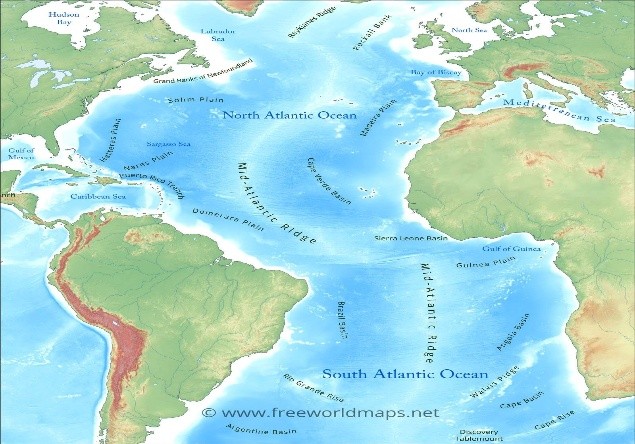
- 20 Aug 2025
In News:
A recent study published in Global and Planetary Change (2025) has uncovered 117-million-year-old mud waves buried nearly 1 km beneath the Atlantic seabed west of Guinea-Bissau. This finding reshapes our understanding of the formation of the Atlantic Ocean, ancient climate patterns, and tectonic shifts during the Cretaceous period.
About Mud Waves
- Definition: Large, rhythmic sedimentary structures formed on the seafloor by persistent bottom currents.
- Age & Size: Approximately 117 million years old; over 1 km long and several hundred meters high.
- Location: Deep seabed, west of Guinea-Bissau, near the Equatorial Atlantic Gateway.
- Composition: Layered sediments preserving evidence of historic ocean circulation.
Formation Process
- Early Atlantic Spillover: Around 117 million years ago, the young North Atlantic Ocean began spilling dense, salty waters into southern basins through the newly formed Equatorial Atlantic Gateway.
- Underwater Avalanches: The influx collided with older, stagnant waters rich in mud and organic matter, triggering massive sediment avalanches.
- Wave Formation: These currents pushed and piled up sediments into wave-like structures, which solidified into permanent mud waves over millions of years.
Scientific Significance
- Rewrites Ocean History: Suggests Atlantic waters circulated much earlier than previously thought.
- Climate Insights: Provides evidence of Cretaceous climate shifts and ancient carbon cycles.
- Tectonic Implications: Offers clues to plate movements shaping Earth’s geography during the breakup of Gondwana.
About the Atlantic Ocean
- Size & Shape: Second-largest ocean after the Pacific; distinctive ‘S’-shape.
- Major Features:
- Mid-Atlantic Ridge: 14,000 km long, ~4 km high, central seafloor mountain range.
- Continental Shelves: Widest along NE America and NW Europe.
- Islands & Seamounts: Azores, Canary Islands, Bermuda, Cape Verde.
- Trenches: Puerto Rico Trench, Romanche Trench (less prominent than Pacific trenches).
- Marginal Seas: Hudson Bay, Gulf of Mexico, Baltic Sea.
India Semiconductor Mission
- 20 Aug 2025
In News:
The Union Cabinet has cleared four new semiconductor manufacturing projects worth ?4,600 crore in Odisha, Punjab, and Andhra Pradesh under the India Semiconductor Mission (ISM). With this, the total number of approved projects under ISM has reached ten across six states, attracting cumulative investments of nearly ?1.60 lakh crore.
Details of Newly Approved Units
- SiCSem Pvt. Ltd. (Odisha):
- In partnership with UK-based Clas-SiC Wafer Fab Ltd.
- India’s first commercial compound semiconductor fabrication unit focused on Silicon Carbide (SiC) devices.
- Capacity: 60,000 wafers and 96 million packaged units annually.
- 3D Glass Solutions Inc. (Odisha):
- Will establish a vertically integrated packaging and embedded glass substrate unit.
- Focus: 3D Heterogeneous Integration modules.
- ASIP Technologies (Andhra Pradesh):
- Joint venture with APACT Co. Ltd., South Korea.
- Annual capacity: 96 million units.
- Applications: Mobile phones, set-top boxes, automobiles, and other electronic devices.
- Continental Device India Pvt. Ltd. (Punjab):
- Brownfield expansion of its Mohali facility.
- Focus: High-power discrete devices – MOSFETs, IGBTs, Schottky diodes, and transistors (using both silicon and SiC).
- Capacity: 158.38 million units annually.
Production from these units is expected to commence within the next 2–3 years.
Progress under ISM
- Launch Year: 2021
- Nodal Ministry: Ministry of Electronics and Information Technology (MeitY)
- Objective: Establish a self-reliant semiconductor and display ecosystem in India.
- Support: Incentive package of ?75,000 crore for fabs, ATMP/OSAT, compound semiconductor plants, and display fabs.
- Capacity Building: Target to train 60,000+ skilled professionals.
- Strategic Significance: Reduce import dependency, boost Atmanirbhar Bharat, and make India a global semiconductor hub.
Major Ongoing Projects under ISM
- Tata-PSMC Fab (Dholera, Gujarat): ?91,526 crore investment; capacity of 50,000 wafers/month for automotive and AI; operational by 2026.
- Micron ATMP (Sanand, Gujarat): ?22,900 crore investment; focus on DRAM and NAND packaging; expected by late 2025.
- Tata TSAT OSAT (Jagiroad, Assam): Output of 48 million chips/day.
- Kaynes OSAT (Sanand, Gujarat): Capacity of 6 million chips/day for telecom and industrial use.
- HCL–Foxconn JV (Uttar Pradesh): To produce 36 million display driver chips/month by 2027.
Burevestnik Missile
- 20 Aug 2025
In News:
According to recent reports, Russia is preparing to conduct fresh trials of the 9M730 Burevestnik – a nuclear-powered cruise missile that has often been described as a “unique” and formidable addition to Moscow’s strategic arsenal.
About the Burevestnik
- The term Burevestnik translates to “storm petrel” in Russian.
- It is a ground-launched, nuclear-powered cruise missile, also capable of carrying a nuclear warhead.
- The system was first unveiled by the Russian President in 2018, as part of six advanced strategic weapons.
- NATO has designated it as SSC-X-9 “Skyfall.”
- In theory, its nuclear propulsion allows it to circle the globe multiple times before striking a target, making it an unprecedented strategic weapon.
Key Features
- Nuclear Propulsion: The missile uses a compact nuclear reactor that heats the surrounding air for thrust.
- Extended Range: Unlike traditional engines restricted by fuel capacity, the nuclear design enables a potential range of up to 22,000 km (14,000 miles).
- Low-Altitude Flight: The system is engineered to fly close to the ground, significantly reducing its detectability by conventional air-defence radars.
- Strategic Significance: Its combination of long endurance and stealthy trajectory poses challenges to existing missile defence systems.
SabhaSaar
- 19 Aug 2025
In News:
The Government of India is set to launch ‘SabhaSaar’, an Artificial Intelligence (AI)-based tool designed to automatically generate structured minutes of gram sabha meetings, thereby enhancing transparency, uniformity, and efficiency in local governance. The tool will be first rolled out in Tripura on Independence Day (August 15) and later extended to other states.
What is SabhaSaar?
- Gram Sabha: It is the primary body of the Panchayati Raj system, consisting of all registered voters of a gram panchayat. Gram sabhas are mandated to meet at least four times a year (January 26, May 1, August 15, and October 2).
- SabhaSaar: An AI tool that converts audio and video recordings of gram sabha meetings into structured minutes, ensuring uniformity across the country.
- Access: Panchayat officials can upload recordings using their e-GramSwaraj login credentials.
Key Features
- AI-driven transcription &summarisation: Generates transcripts, translates into the chosen language, and prepares concise summaries.
- Language inclusivity: Built on Bhashini, the government’s AI-powered language platform, it supports transcription in all major Indian languages (Hindi, Bengali, Tamil, Telugu, Marathi, Gujarati) and English.
- Standardisation: Ensures uniformity of gram sabha documentation nationwide.
- Ease of governance: Facilitates instant access to insights for panchayats, administrative bodies, and rural development projects.
Associated Reforms for Gram Sabhas
- Panchayat NIRNAY Portal: A real-time monitoring system for gram sabha meetings, enabling scheduling, agenda notification to citizens, decision tracking, and transparency in implementation.
- Recent progress: In 2024–25, more than 10,000 gramsabha meetings were held through the NIRNAY platform, with Punjab, Andhra Pradesh, Telangana, and Bihar leading in usage.
Significance
- Governance efficiency: Automates and digitises record-keeping, reducing errors and delays.
- Transparency & accountability: Ensures that decisions of gram sabhas are properly recorded and accessible.
- Public participation: Facilitates better citizen awareness and engagement in local governance.
- Bridging digital divide: Through Bhashini, makes governance accessible across linguistic barriers.
Cheque Truncation System (CTS)
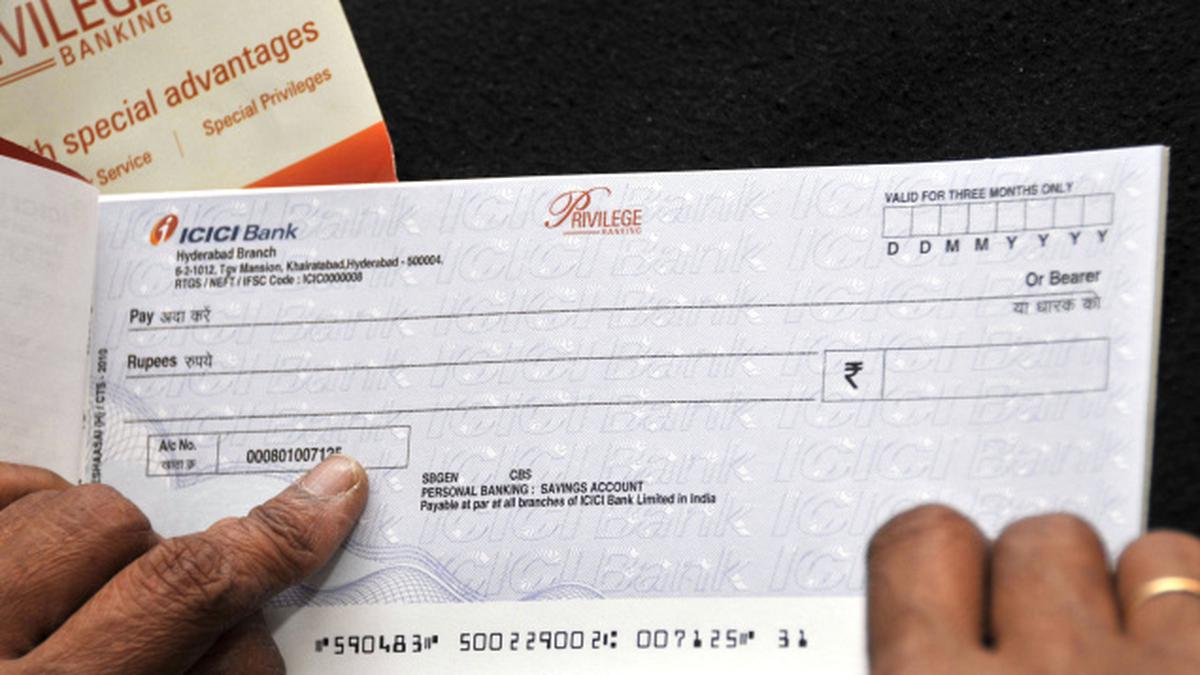
- 19 Aug 2025
In News:
The Reserve Bank of India (RBI) has announced the transition of the Cheque Truncation System (CTS) from batch processing to a continuous clearing mechanism, with settlement on realisation, to be implemented in two phases. This reform aims to further enhance efficiency, reduce delays, and strengthen the digitalisation of cheque-based transactions.
About Cheque Truncation System (CTS)
- Introduced by RBI to speed up cheque clearance and minimise physical movement of instruments.
- Process: Physical cheques are truncated at the collecting bank; only cheque images and MICR data are transmitted electronically.
- Security: Protected by a PKI-based security architecture with dual access controls, user authentication, crypto box, and smart card interfaces.
- CTS-2010 Standards: Only compliant instruments are accepted, ensuring:
- Use of specified paper quality, watermark, and invisible-ink logos.
- Mandatory minimum-security features like void pantograph.
- Standardised cheque design for uniform image-based processing.
Current vs. New System
- Current CTS: Clearing cycle takes up to two working days.
- New System (Continuous Clearing):
- Cheques will be cleared within hours of submission.
- Settlement will occur on realisation basis rather than at fixed batch intervals.
Benefits
- Faster Settlement: Realisation of cheque proceeds on the same day.
- Efficiency Gains: Reduced bottlenecks and delays in processing.
- Cost Savings: Eliminates costs linked to physical cheque movement.
- Security & Reliability: Enhanced authentication safeguards against fraud.
- Better Data Management: Easy storage and retrieval of digital records via a centralised archival system.
- Customer Convenience: Shorter clearing cycles improve banking efficiency for individuals and businesses.
NashaMukt Bharat Abhiyaan (NMBA)

- 19 Aug 2025
In News:
India has intensified efforts to combat substance abuse through community engagement and national-level programmes. Recently, a “Drug-Free India” campaign was held in Mysuru, complementing the larger framework of the NashaMukt Bharat Abhiyaan (NMBA), which has completed five years since its launch in 2020.
About NashaMukt Bharat Abhiyaan (NMBA)
- Launched: 15 August 2020.
- Nodal Ministry: Ministry of Social Justice & Empowerment (MoSJE).
- Objective:
- Reduce drug demand through awareness, prevention, and education.
- Strengthen community response by mobilising youth, women, and local institutions.
- Provide rehabilitation and treatment support to victims of addiction.
Key Features
- Targeted Districts: Implemented in 272 high-risk districts identified through national surveys and Narcotics Control Bureau (NCB) data.
- Three-Pronged Strategy:
- Supply Reduction: Led by NCB.
- Demand Reduction: Community outreach under MoSJE.
- Treatment: Medical interventions coordinated by the Health Department.
- Community-Based Model: District and state committees headed by senior officials ensure localised implementation.
- Technology Integration: Dedicated NMBA app, website, and social media platforms for wider outreach.
- Mass Mobilisation: Partnerships with civil society organisations like Art of Living, Brahma Kumaris, and ISKCON for awareness drives.
Impact
- Public Health: Over 18 crore citizens sensitised, with a focus on youth and women.
- Capacity Building: More than 20,000 Master Volunteers trained nationwide.
- Social Stability: Contributed to reducing drug-related crime and strengthening the social fabric.
- Awareness Events: Local campaigns such as the Drug-Free India drive in Mysuru amplify the Abhiyaan’s outreach at the grassroots level.
Significance
- Strengthens India’s commitment to tackling the drug menace through prevention, rehabilitation, and community participation.
- Complements India’s obligations under international conventions on narcotic drug control.
- Directly contributes to SDG 3 (Good Health and Well-being) and SDG 16 (Peace, Justice, and Strong Institutions).
Human African Trypanosomiasis (HAT)
- 19 Aug 2025
In News:
The World Health Organization (WHO) has certified Kenya as free from human African trypanosomiasis (HAT), or sleeping sickness, marking it the 10th African nation to eliminate the disease as a public health problem (August 2025). This is Kenya’s second victory against a Neglected Tropical Disease (NTD) after eliminating guinea worm disease in 2018.
About Human African Trypanosomiasis (HAT)
- Cause: A vector-borne parasitic disease caused by the protozoa Trypanosoma brucei.
- Vector: Spread by the bite of infected tsetse flies (Glossina spp.).
- Types:
- T.b.gambiense (West & Central Africa): Chronic, slow-progressing form.
- T.b. rhodesiense (East & Southern Africa): Acute, fast-progressing form (present in Kenya).
- Symptoms:
- First stage: Fever, headache, joint pain, swollen lymph nodes.
- Second stage: Parasites invade the central nervous system → confusion, behavioural changes, loss of coordination, and disrupted sleep cycle.
- Fatal if untreated, though effective drugs exist (pentamidine, suramin, fexinidazole, nifurtimox–eflornithine, melarsoprol), supplied free by WHO.
Kenya’s Journey
- History: First detected in early 20th century; no indigenous cases since 2009. Last imported cases reported in 2012 (Masai Mara).
- Control measures:
- Strengthened disease surveillance in 12 facilities across 6 endemic counties (Busia, Siaya, Kisumu, Homa Bay, Migori, Kwale).
- Upgraded laboratories, diagnostic capacity, and trained personnel.
- Controlled tsetse flies and animal trypanosomiasis with veterinary support.
- Partnerships: WHO, Kenya’s Ministry of Health, FIND (Foundation for Innovative New Diagnostics), and community engagement played key roles.
Global Context
- WHO’s NTD Road Map 2021–2030: Target—100 countries to eliminate at least one NTD by 2030.
- So far, 57 countries (including Burundi, Senegal) have achieved elimination of at least one NTD.
- However, cuts in international funding threaten progress, risking resurgence in vulnerable areas.
- Success is critical for meeting SDG 3 (Good Health and Well-being), particularly the target of ending epidemics of NTDs by 2030.
Bhu-Neer Portal

- 19 Aug 2025
In News:
The Bhu-Neer Portal, launched in 2024 during the 8th India Water Week by the Ministry of Jal Shakti, is a digital initiative developed by the Central Ground Water Authority (CGWA) in collaboration with the National Informatics Centre (NIC). It represents a significant reform in the regulation and management of groundwater extraction in India.
Background:
- CGWA: Constituted under the Environment (Protection) Act, 1986, regulates and controls the development and management of groundwater resources in the country.
- NIC: Established in 1976, under MeitY, it supports e-Governance and digital platforms for sustainable development.
- The portal replaces the earlier NOCAP system, offering a more transparent, user-friendly, and efficient mechanism for granting No Objection Certificates (NOCs) for groundwater abstraction.
Objectives:
- To provide a centralised, transparent, and efficient platform for groundwater regulation.
- To ensure compliance with the Guidelines of September 24, 2020 on groundwater abstraction.
- To promote sustainability by integrating water conservation measures such as rooftop rainwater harvesting and sewage treatment plants.
Key Features:
- PAN-based Single ID System for ease of access and integration with payment gateways.
- QR code-enabled NOCs for secure and quick verification.
- Online charges calculator for transparency in fee structures.
- Eligibility checker before filing applications.
- Query module for real-time interaction with CGWA officials.
- SMS and email alerts to track application status.
- Centralised database for groundwater compliance, policies, and monitoring.
Scope:
- Applicable in 19 States/UTs where groundwater regulation is under CGWA’s jurisdiction.
- Covers industries, infrastructure, and mining projects seeking to abstract groundwater.
Significance:
- Strengthens enforcement of groundwater guidelines, curbing indiscriminate extraction.
- Enhances Ease of Doing Business by streamlining NOC procedures.
- Promotes water-use efficiency and sustainable management of depleting groundwater resources.
- Facilitates greater transparency and accountability in resource governance.
Awareness & Outreach:
- The Ministry has organized workshops with industry bodies and Public Interaction Programmes (PIPs) to promote adoption of the portal among stakeholders.
Chagas Disease
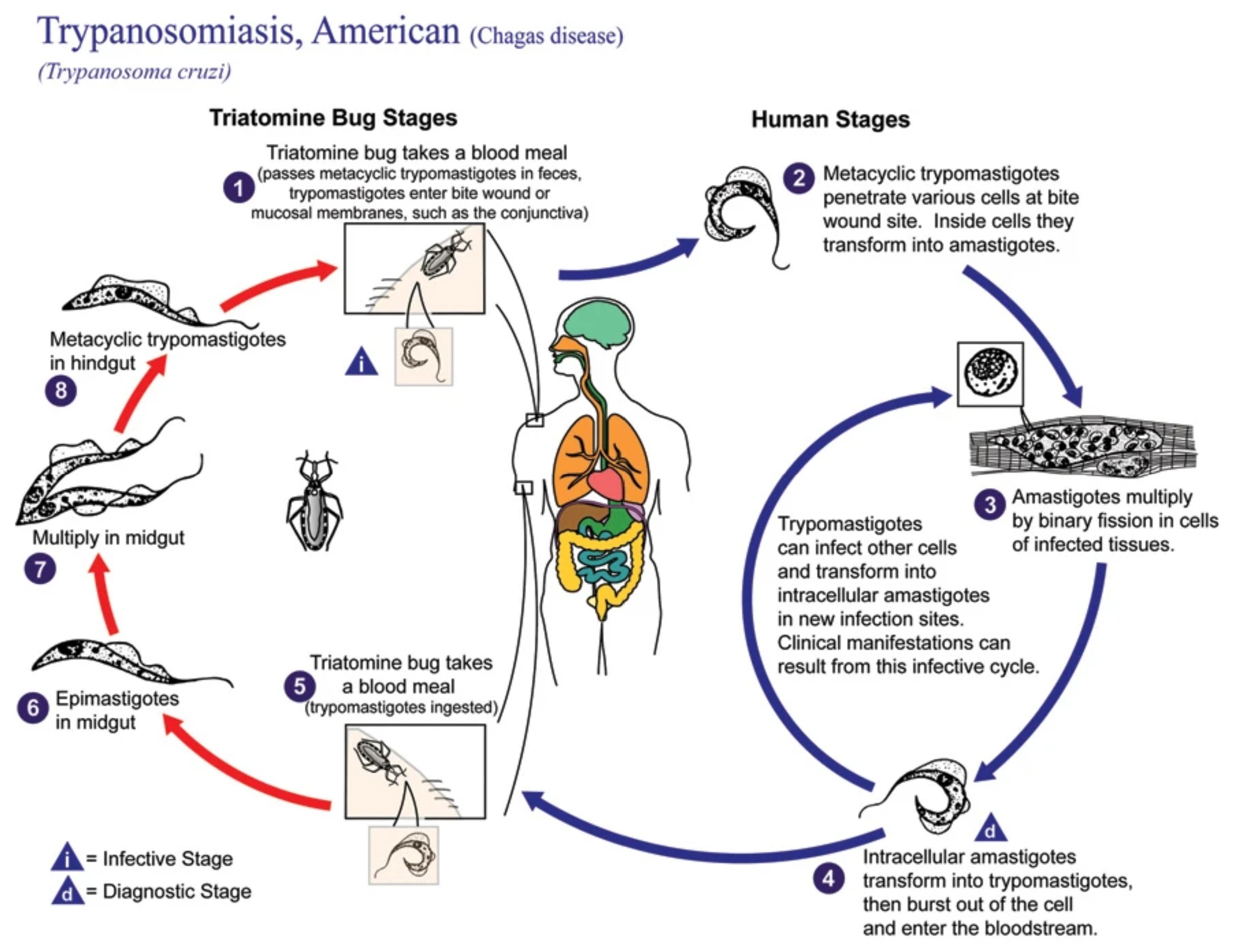
- 18 Aug 2025
In News:
- Chagas disease, or American trypanosomiasis, is an infection caused by the protozoan Trypanosoma cruzi and is transmitted primarily through the feces of triatomine bugs—commonly known as “kissing bugs.”
- It can also spread via congenital transmission (from mother to child), contaminated food or water, blood transfusion, organ transplant, or during laboratory handling.
- Though initially endemic to South and Central America, and Mexico, the disease has now emerged as a global health concern, partly due to migration and local vector presence in places like the southern United States.
Clinical Progression & Treatment
- Many infected individuals remain asymptomatic initially, but chronic infection can lead to severe cardiac and digestive complications if left untreated.
- In the acute phase, antiparasitic treatment is aimed at eliminating the parasite. In the chronic phase, therapeutic focus shifts to managing symptoms since parasite clearance becomes difficult.
Alarming Underinvestment in R&D
- R&D investment for Chagas disease is startlingly low—accounting for only 0.6% of all neglected disease research globally.
- This share is even smaller when compared to other tropical diseases: less than US$1 million was spent on new drug development in 2007, constituting a mere 0.04% of neglected disease R&D funding.
- Between 2009 and 2018, US$236 million was invested in Chagas-related R&D—just 0.67% of the total neglected disease investment. Only a handful of funders (NIH, industry, Wellcome Trust) accounted for the majority.
- Patent data reflect this disparity, especially in vaccine development—highlighting significant underinvestment relative to the global health threat posed by Chagas.
- To put it in perspective, malaria receives 20 times more funding than Chagas.
Pathways to Progress
- Innovative Therapies: Research shows promise in novel, low-cost immunotherapeutic agents derived from cyanobacteria that may offer safer and more tolerable options than current drugs.
- Campaigns and Advocacy: Initiatives like the “Chagas: Time to Treat” campaign by DNDi (Drugs for Neglected Diseases Initiative) emphasize urgent need for:
- Affordable, pediatric formulations
- Safe, field-ready treatments for chronic phases
- Greater public and private funding for R&D.
Broader Significance and Current Calls to Action
- Chagas disease remains among the most neglected tropical diseases, impacting an estimated 6 million people, causing approximately 12,000 deaths annually, and contributing to over 30,000 new cases each year—mainly in Latin America.
- Effective solutions require:
- Improved surveillance and mandatory case notification systems
- Enhanced training and diagnostic tools for health workers
- Integration of One Health approaches (veterinary, environmental control, and human health) in vector management.
- Investment in neglected disease R&D delivers substantial societal returns—studies suggest $1 spent yields $405 in broader economic and health benefits.
18th International Olympiad on Astronomy and Astrophysics
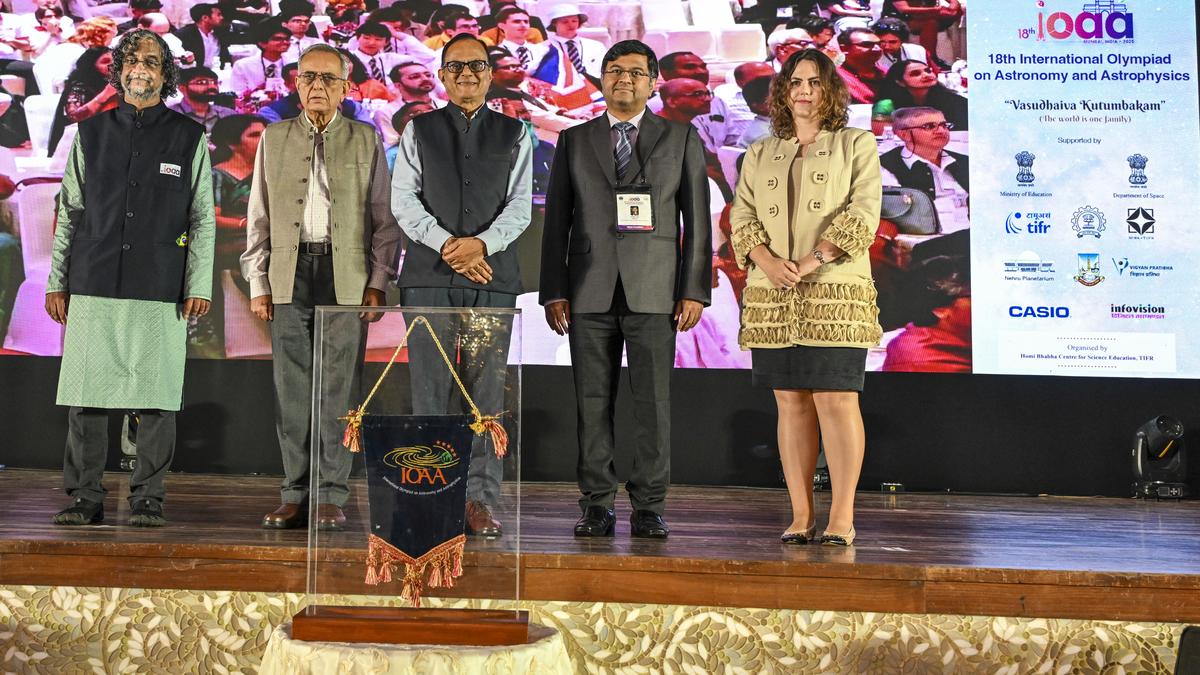
- 18 Aug 2025
In News:
India is hosting the 18th International Olympiad on Astronomy and Astrophysics (IOAA) in Mumbai, Maharashtra, with participation from over 300 young astronomers from 64 countries. The event is jointly organised by the Homi Bhabha Centre for Science Education (HBCSE), Tata Institute of Fundamental Research (TIFR), and the Union Ministry of Education.
About IOAA:
- A premier global competition for high-school students in astronomy, astrophysics, and observational sciences.
- Tests theoretical knowledge, data analysis skills, and observational abilities.
- Objectives:
- Promote scientific thinking and problem-solving in space sciences.
- Encourage international cooperation and cultural exchange.
- Inspire careers in space sciences and research.
- Showcase India’s scientific and technological progress.
Features of the 18th Edition:
- Largest-ever IOAA with record participation from 64 nations.
- Competition includes written exams, data analysis, and night-sky observations.
- Highlighting India’s legacy: From Aryabhatta’s discoveries to modern space missions like Chandrayaan-3 (historic landing near Moon’s South Pole) and Aditya-L1 (India’s first solar observatory).
- Showcasing STEM Empowerment:
- Atal Tinkering Labs benefitting over 10 million students through hands-on STEM learning.
- One Nation One Subscription scheme providing free access to global research journals for students and researchers.
- Global Collaboration: Participation in mega-science projects such as the Square Kilometre Array and LIGO-India.
Significance for India:
- Strengthens India’s global image as a leader in space sciences and STEM education.
- Provides a platform for showcasing India’s scientific achievements and educational initiatives.
- Encourages the next generation to pursue careers in astronomy, astrophysics, and research.
- Aligns with India’s broader vision of linking science, innovation, and human welfare.
UNDP Equator Initiative Award 2025
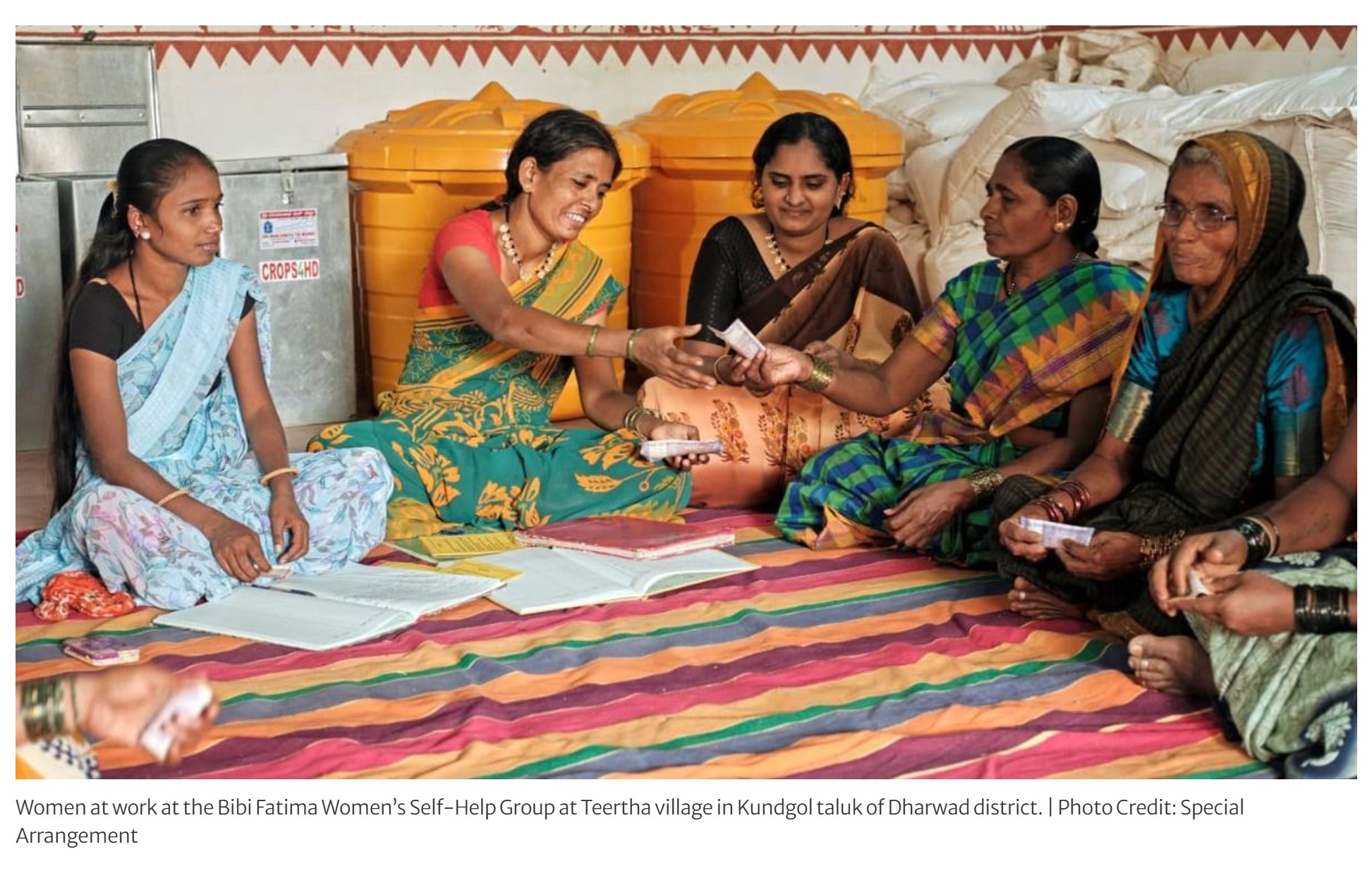
- 18 Aug 2025
In News:
The Bibi Fatima Women’s Self-Help Group (SHG) from Teertha village, Kundgol taluk, Dharwad district, Karnataka, has won the prestigious Equator Initiative Award 2025. The award, often referred to as the Nobel Prize for Biodiversity Conservation, honours community-led, nature-based solutions for sustainable development.
About the Equator Initiative Award:
- Organiser: United Nations Development Programme (UNDP) under its Equator Initiative.
- Nature: Recognises local and indigenous communities for biodiversity conservation, ecological resilience, and poverty reduction.
- Frequency: Biennial.
- Prize: Includes a cash award of $10,000 (approx. ?8.5 lakh).
- Theme (2025):“Women and Youth Leadership for Nature-Based Climate Action”.
- Eligibility: The initiative must have been active for at least three years, community-based, and contribute to at least two Sustainable Development Goals (SDGs).
In 2025, Bibi Fatima SHG was the only Indian winner, alongside groups from Argentina, Brazil, Ecuador, Indonesia, Kenya, Papua New Guinea, Peru, and Tanzania.
Achievements of Bibi Fatima SHG:
- Formation: Established in 2018 by 15 women, with support from Sahaja Samruddha (NGO), Indian Institute of Millets Research (IIMR, Hyderabad), and CROPS4HD.
- Eco-Friendly Farming: Revived millet-based mixed cropping systems on rainfed lands through natural and climate-resilient farming practices in nearly 30 villages.
- Community Seed Bank: Distributes millet seeds free of cost to farmers, strengthening local seed sovereignty.
- Food & Nutrition Security: Promoted millets to improve dietary diversity and resilience against climate change.
- Women-led Enterprise: Established a solar-powered millet processing unit with support from SELCO Foundation, entirely managed by women.
- Value Addition & Marketing: Produces millet-based products such as rotis and vermicelli, boosting local markets.
- Livelihood Diversification: Expanded into livestock rearing, horticulture, and farmers’ markets, improving incomes of small and marginal households.
- Partnerships: Collaborates with Devadhanya Farmer Producer Company to scale rural, agriculture-based enterprises.
Significance:
- Strengthens the role of women’s leadership in climate action and sustainable agriculture.
- Demonstrates a successful community-driven model for biodiversity conservation, food security, and rural entrepreneurship.
- Aligns with India’s efforts to revive millets (International Year of Millets 2023) and promote climate-resilient farming.
- Advances multiple SDGs – notably SDG 1 (No Poverty), SDG 2 (Zero Hunger), SDG 5 (Gender Equality), SDG 12 (Responsible Consumption and Production), and SDG 13 (Climate Action).
State Health Regulatory Excellence Index
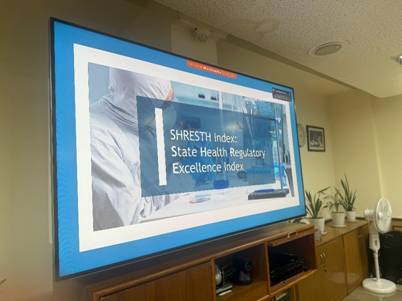
- 18 Aug 2025
In News:
The Union Health Secretary, Smt. Punya Salila Srivastava, recently launched the State Health Regulatory Excellence Index (SHRESTH), a first-of-its-kind national framework to benchmark and strengthen state drug regulatory systems through transparent, data-driven assessments. The initiative has been developed by the Central Drugs Standard Control Organization (CDSCO) in collaboration with states and UTs.
About SHRESTH:
- Objective: To improve the performance of state drug regulatory authorities, ensuring drug safety, quality, and efficacy across India.
- Nature: Functions as a virtual gap-assessment tool, enabling states to measure their regulatory preparedness and move towards maturity certification.
- Categories of States:
- Manufacturing States: Assessed on 27 indices under five themes – Human Resources, Infrastructure, Licensing Activities, Surveillance Activities, Responsiveness.
- Primarily Distribution States/UTs: Assessed on 23 indices under similar themes.
- Process:
- States/UTs submit predefined data to CDSCO by the 25th of every month.
- Metrics are scored on the 1st of the following month and shared with all states/UTs.
- Significance:
- Enables targeted improvements in infrastructure, digitisation, inspection, and grievance redressal.
- Promotes cross-learning by sharing best practices of top-performing states.
- Provides a roadmap rather than a scorecard, encouraging harmonization of drug regulatory systems nationwide.
Wallacean Hominids
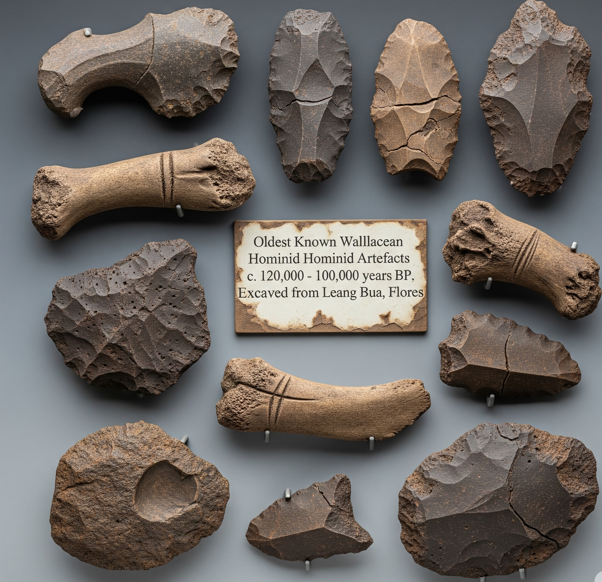
- 18 Aug 2025
In News:
Recent archaeological findings on Sulawesi Island, Indonesia, have revealed stone tools dating back to nearly 1.5 million years ago, marking the earliest known evidence of human presence in the Wallacea region.
Key Findings:
- Archaeologists from Australia and Indonesia discovered small, chipped stone tools in the Soppeng region of South Sulawesi.
- The artefacts, likely used to cut small animals and carve rocks, were found along with animal teeth.
- Radioactive dating suggests the tools are up to 1.48 million years old.
- These findings were published in Nature (August 2025).
Significance:
- The artefacts are attributed to Homo erectus, pre-historic hominids that lived long before the emergence of Homo sapiens.
- Previously, Homo erectus in Wallacea were thought to have occupied only Flores (Indonesia) and Luzon (Philippines) around 1.02 million years ago.
- The Sulawesi discovery pushes back the timeline by almost half a million years, challenging earlier assumptions that Homo erectus lacked the capacity for long-distance sea crossings.
- It provides crucial evidence of early maritime dispersal and migration patterns of ancient humans from the Asian mainland into island ecosystems.
About Wallacea:
- Wallacea is a biogeographic region in Eastern Indonesia, comprising islands such as Sulawesi, Lombok, Flores, Timor, and Sumbawa, situated between Borneo–Java and Australia–New Guinea.
- The region is named after Alfred Russel Wallace, the naturalist who studied its distinct biodiversity.
- It acts as a natural transitional zone between the fauna of Asia and Australia.
Satellite Internet
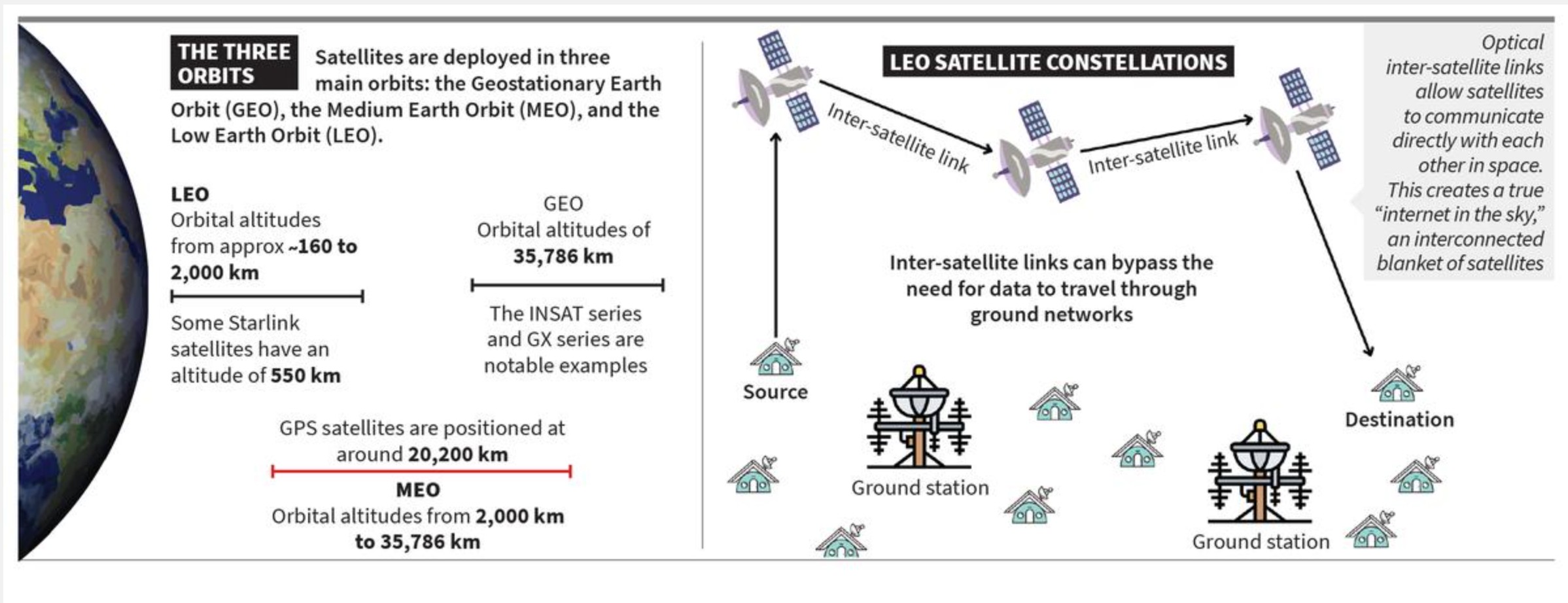
- 17 Aug 2025
In News:
The advent of satellite internet, spearheaded by mega-constellations like Elon Musk’s Starlink, is set to transform global connectivity. With Starlink’s expected entry into India, this technology carries vast implications for bridging the digital divide, disaster resilience, national security, and economic development.
Why Satellite Internet?
Conventional internet networks rely on cables and towers, which are efficient in urban areas but face limitations:
- Economically unviable in sparsely populated or remote regions.
- Vulnerable to disruptions from floods, earthquakes, or cyclones.
- Restricted mobility, failing to meet connectivity needs for ships, aircraft, or defence units in rugged terrains.
Satellite internet addresses these gaps by providing global, resilient, and mobile coverage, independent of terrestrial infrastructure. It can be rapidly deployed in emergencies and enables connectivity in conflict zones or offshore locations.
How Satellite Internet Works
A satellite internet network has two key segments:
- Space Segment: Satellites orbiting Earth, carrying communication payloads (antennas, transponders, onboard processors).
- Ground Segment: User terminals, antennas, and ground stations that link devices to satellites.
Data flow: When a user sends a request, the signal goes to the satellite → routed to a ground station connected to the internet backbone → response sent back via satellite to the user.
Seamless handover: Especially in Low Earth Orbit (LEO), satellites move fast (~27,000 km/hr) and stay over a region only for minutes. Smart handovers between satellites ensure uninterrupted connectivity.
Types of Orbits
|
Orbit Type |
Altitude |
Advantages |
Limitations |
Example |
|
Geostationary Earth Orbit (GEO) |
~35,786 km |
Covers ~? of Earth; stable position |
High latency, no polar coverage |
Viasat Global Xpress |
|
Medium Earth Orbit (MEO) |
2,000–35,786 km |
Balanced coverage & latency |
Needs constellations; still moderate latency |
O3b Network |
|
Low Earth Orbit (LEO) |
<2,000 km |
Very low latency; smaller, cheaper satellites |
Small footprint; requires mega-constellations |
Starlink (7,000+ satellites, plans for 42,000) |
Key Features of Satellite Internet
- Global Coverage: Works across oceans, mountains, deserts, and polar regions.
- Dual-use Technology: Supports both civilian services and military operations.
- Rapid Deployment: Can be activated within hours during emergencies.
- Network Resilience: Independent of local telecom infrastructure.
- Mega-Constellations: Thousands of interconnected satellites with optical inter-satellite links create an “internet in the sky,” reducing reliance on ground stations.
Applications
- Civilian: Expands broadband to rural and island communities, supports e-governance, smart farming, education, and environmental monitoring.
- Disaster Management: Provides resilient connectivity after cyclones, floods, or earthquakes (e.g., Hurricane Harvey, 2017).
- Defence & Security: Ensures battlefield communication, drone operations, and secure links in high-altitude zones (e.g., Indian Army at Siachen, Ukraine’s defence using Starlink).
- Transport: Improves aviation, shipping, and autonomous vehicle navigation.
- Healthcare: Enables telemedicine and remote patient monitoring.
- Space Economy: Strengthens global trade, logistics, and exploration.
Orbiting Carbon Observatories (OCO)Program
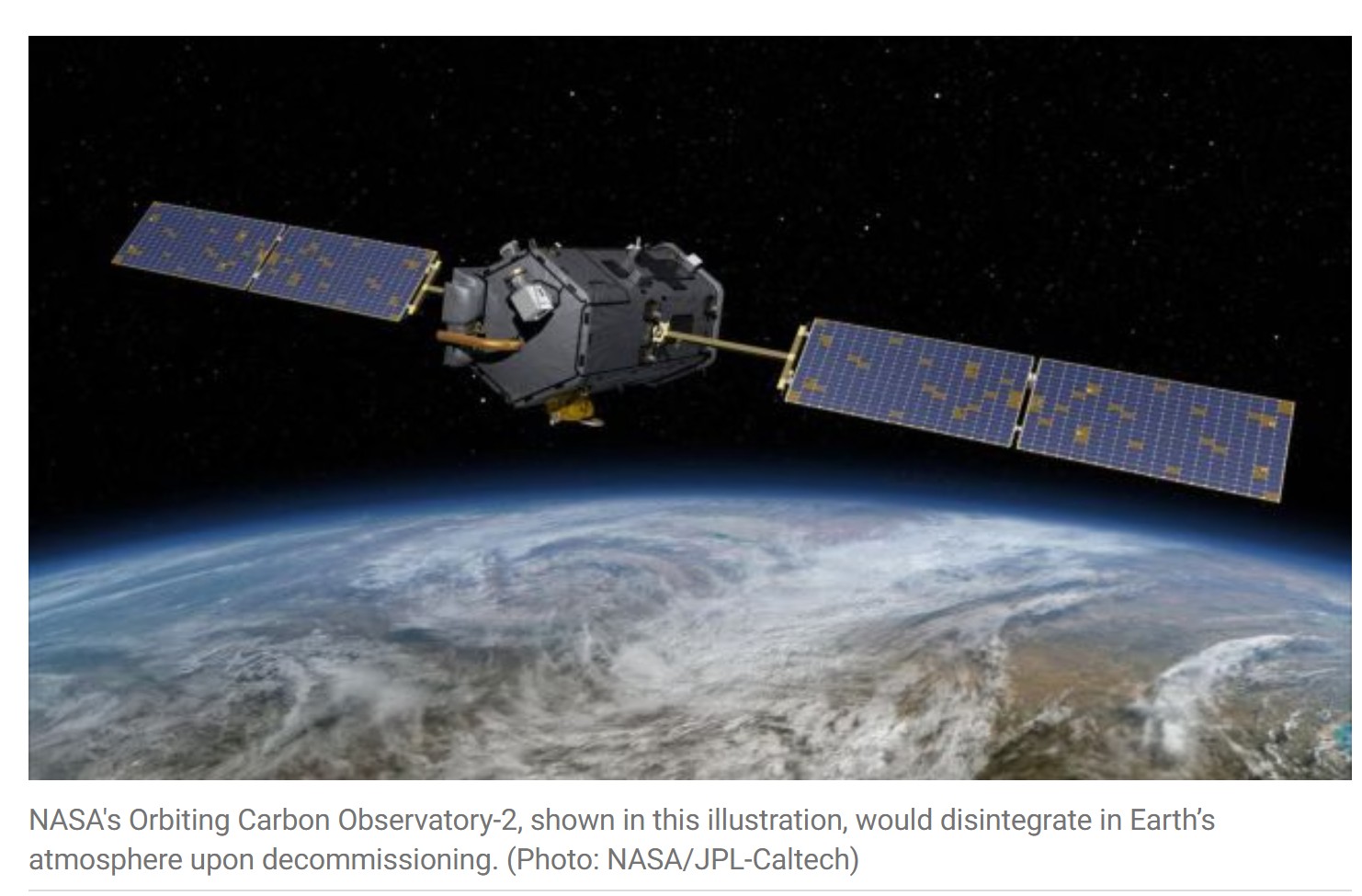
- 17 Aug 2025
In News:
The Trump administration has proposed terminating NASA’s Orbiting Carbon Observatories (OCO) program, a key initiative monitoring global carbon dioxide (CO?) emissions and plant health. The move, part of the 2026 federal budget, has triggered concerns among scientists and lawmakers given its implications for climate monitoring and policy.
About the Orbiting Carbon Observatories (OCO) Program
- Objective: Dedicated Earth remote-sensing satellites designed to observe atmospheric CO? and study its role in climate change.
- Timeline:
- OCO-1 (2009): Failed shortly after launch.
- OCO-2 (2014): Successfully launched, providing high-precision global CO? data.
- OCO-3 (2019): Installed on the International Space Station (ISS) to enhance observations.
- Significance:
- Produced high-resolution maps of plant growth, drought stress, and carbon fluxes.
- Helped discover that the Amazon rainforest emits more CO? than it absorbs, while boreal forests in Canada and Russia are turning into unexpected carbon sinks.
- Tracked photosynthesis rates to forecast crop yields, drought conditions, and food shortages—data crucial for global food security and preventing civil unrest.
- Utilized by the US Department of Agriculture and private agricultural firms for crop yield predictions and rangeland management.
Reasons for Proposed Termination
- The administration claims the missions are “beyond their prime mission” and need to align with new budgetary priorities.
- Funding for OCO missions is excluded from the proposed 2026 budget.
International dimension:
-
- Scientists are exploring partnerships with Japan and Europe to keep OCO-3 operational on the ISS.
- Private or philanthropic funding is also being considered, though experts warn this is unsustainable.
Dardanelles Strait
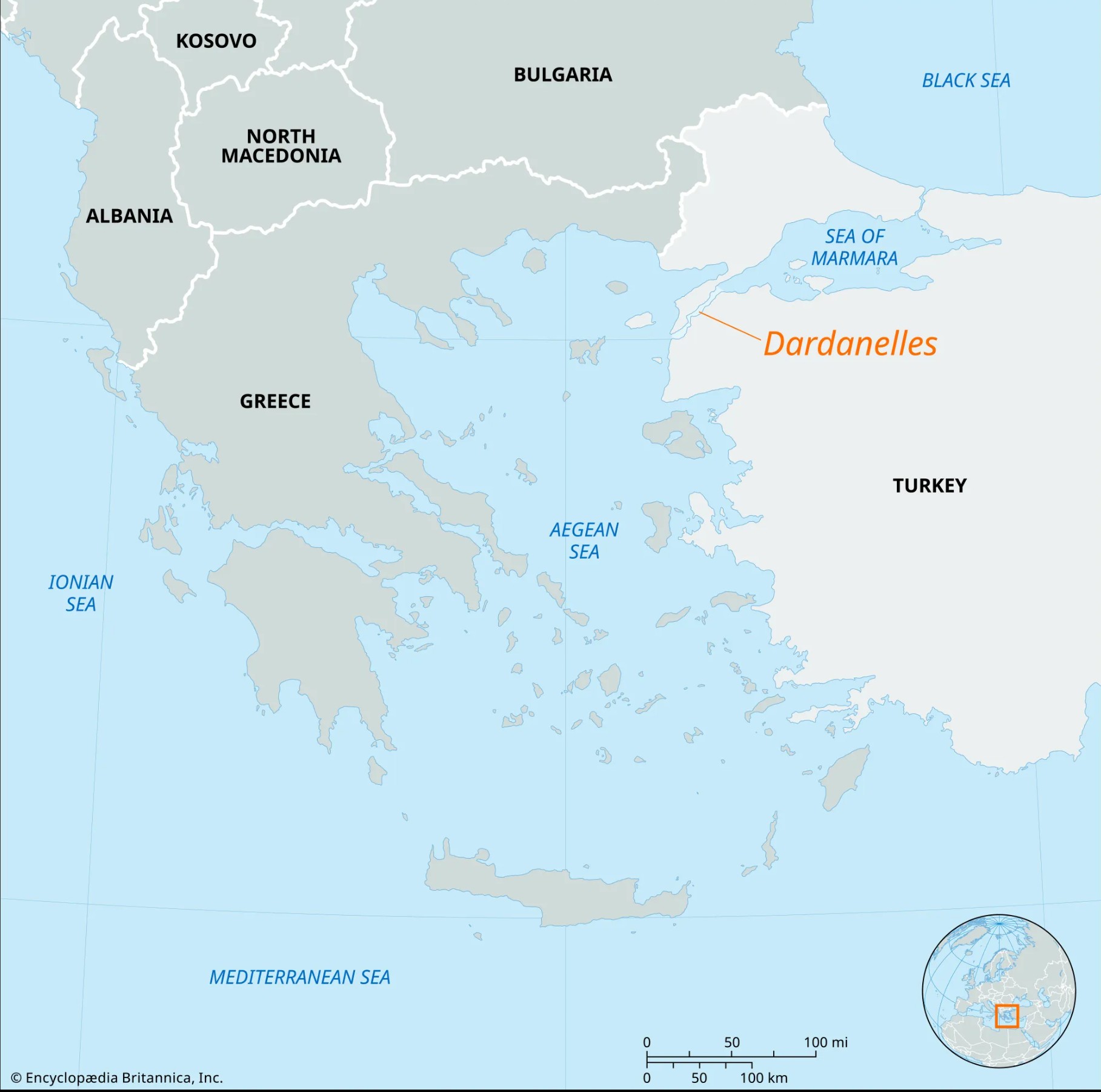
- 17 Aug 2025
In News:
The Dardanelles Strait, a narrow but vital maritime passage in northwestern Turkey, was recently closed to shipping traffic after severe forest fires broke out near Çanakkale province. The incident highlights the strait’s enduring strategic, economic, and environmental importance.
Geographical Overview
- Length: 61 km; Width: 1.2–6.5 km.
- Depth: Average ~55 m, maximum ~90 m in central narrow sections.
- Location: Separates the Gallipoli Peninsula (Europe) from Anatolia (Asia), lying entirely within Turkey’s territorial waters.
- Connectivity: Links the Aegean Sea to the Sea of Marmara, and with the Bosphorus Strait, forms the Turkish Straits system, connecting the Mediterranean to the Black Sea.
- Hydrology: Two-way currents – surface flow from Marmara to the Aegean, undercurrent in the reverse direction.
- Ports: Major ones include Gallipoli, Eceabat, and Çanakkale.
Strategic and Economic Significance
- Maritime Trade: Nearly 46,000 vessels crossed the Dardanelles in 2024, underscoring its role as a global shipping artery between Europe and Asia.
- Chokepoint Status: Serves as a gateway to Istanbul and the Black Sea, shaping regional power dynamics.
- Fisheries: Rich in migratory fish species, supporting local economies.
- Geopolitical Role: Critical for Turkey’s strategic influence, NATO security, and Black Sea maritime routes.
Historical Importance
- Known in antiquity as the Hellespont.
- Greek mythology: Associated with the tale of Hero and Leander.
- Ancient campaigns: Xerxes I of Persia crossed via a pontoon bridge (480 BCE); Alexander the Great crossed during his conquest of Asia (334 BCE).
- Modern conflicts: Key battleground in World War I’s Gallipoli Campaign, where Allied forces attempted but failed to seize control.
Nüshu: Revival of the World’s Only Women’s Script
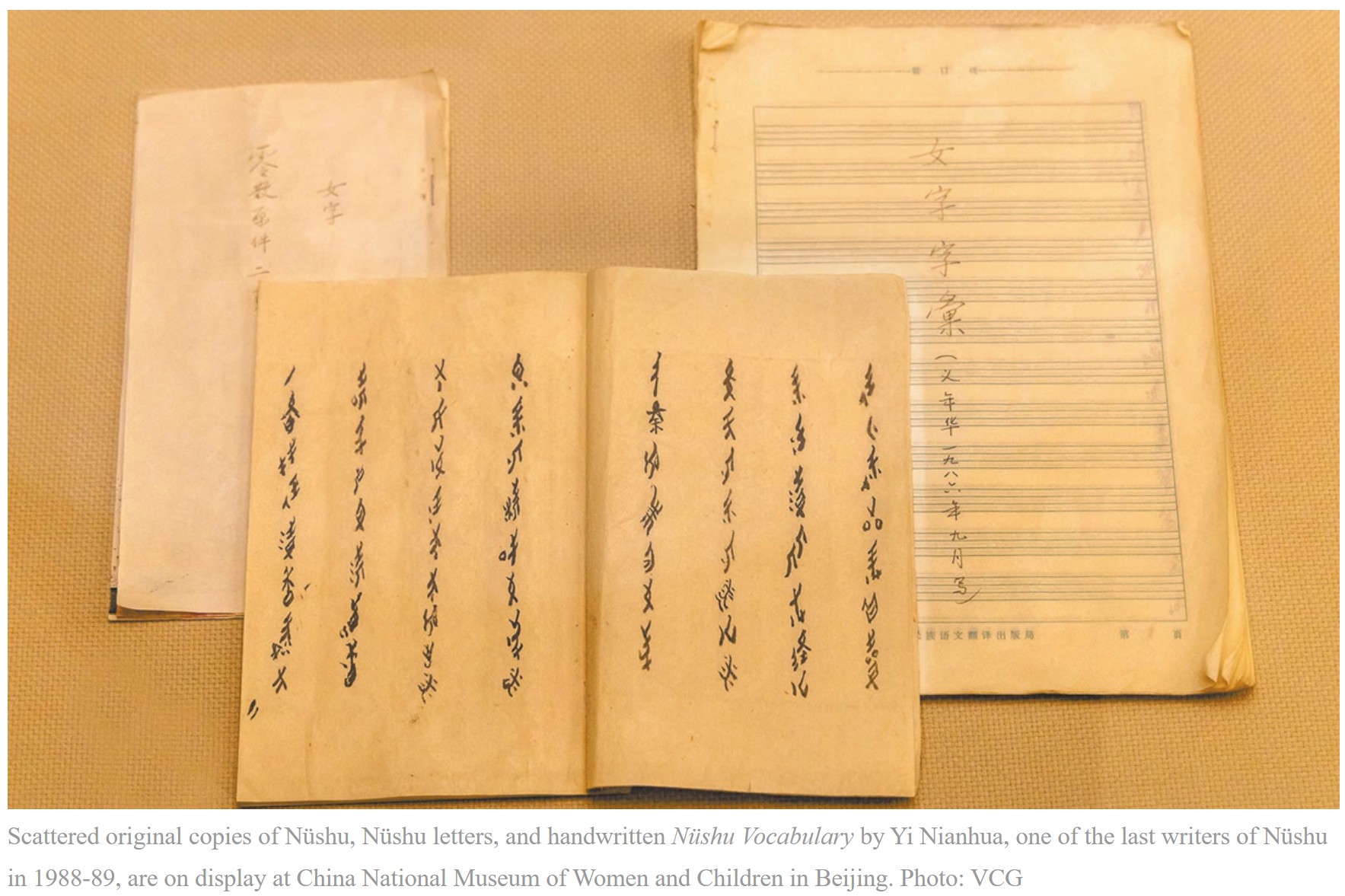
- 17 Aug 2025
In News:
Nüshu, literally meaning “women’s writing” in Chinese, is a unique script originating in the 17th century in Jiangyong, Hunan Province. Developed when women were excluded from formal education, it functioned as a private communication system among women through letters, embroidery, songs, and poetry. With around 500 core characters, it is the only known writing system in the world created and used exclusively by women.
Distinctive Features
- Form: Rhomboid, thread-like characters derived from traditional Chinese script; composed of dots, horizontals, virgules, and arcs.
- Medium of Use: Mothers taught daughters; used among sisters and friends. Content included folk songs, riddles, autobiographies, and translations of Chinese poems.
- Symbolism: Embodied sisterhood, resilience, and empowerment in a patriarchal society.
Historical Transformation and Conservation
- Decline: By the late 20th century, Nüshu faced near extinction with the death of its last native writers such as Yi Nianhua (1988–89).
- Revival Efforts: Since the 21st century, museums, training centers, and manuals have been established to preserve and promote Nüshu.
- National Recognition: Inscribed on China’s National Intangible Cultural Heritage list; efforts are ongoing for UNESCO recognition.
- Community Role: Women inheritors and enthusiasts continue to practice Nüshu as a cultural art form, while scholars study its historical and social value.
Technology and Modern Adaptation
- Digital Archiving: Unicode integration, high-resolution scans, and cloud storage aid global accessibility.
- AI Tools: Machine learning assists in translation and decoding.
- Global Outreach: Social media, e-courses, AR/VR exhibitions, and documentaries such as Hidden Letters have amplified its relevance.
- Cultural Integration: Featured in creative mediums—e.g., WeChat memes celebrating Chinese female athletes during the Paris 2024 Olympics—blending heritage with contemporary culture.
Social and Cultural Impact
- Women’s Empowerment: Nüshu fosters confidence, independence, and identity among modern women, especially Gen Z.
- Dialogue Across Genders: Increasing interest among men reflects its role as a bridge between genders, expanding from women’s private script to a shared cultural heritage.
- Economic Potential: Provides livelihood through digital art, tourism, crafts, and cultural exchanges.
Smooth-Coated Otters
- 17 Aug 2025
In News:
In a significant conservation development, the National Zoological Park (NZP), Delhi, has welcomed a pair of smooth-coated otters from the Shyamaprasad Mukherji Zoological Garden, Surat, marking the first such arrival in two decades. The last otter at the Delhi Zoo died in 2004. The transfer took place under a Central Zoo Authority (CZA)-approved exchange programme.
About Smooth-Coated Otters (Lutrogaleperspicillata)
- Taxonomy: The only extant member of the genus Lutrogale.
- Distribution: Found across India, southern and Southeast Asia, China, and Iraq (small population).
- Habitat: Freshwater wetlands, mangroves, peat swamps, forested rivers, lakes, rice paddies; capable of long overland movements.
- Features:
- Largest otter species in Southeast Asia.
- Smooth, short fur (brown dorsally, lighter ventrally) with water-repellent guard hairs.
- Social animals, hunt in groups, often using V-formations while fishing upstream.
- Threats:
- Habitat loss due to urbanization, agriculture, and pollution (fertilizers, pesticides).
- Poaching for fur and pet trade.
- Conservation Status: IUCN – Vulnerable.
Landmark Study on Dengue Immunity
- 14 Aug 2025
In News:
A new study published in Science Translational Medicine has provided critical insights into dengue immunity and vaccine development. The research, conducted in the Philippines with nearly 3,000 children, highlighted the role of Envelope Dimer Epitope (EDE)-like antibodies as a key driver of broad, cross-serotype protection against dengue virus (DENV).
Dengue: Global Challenge
- Caused by four serotypes (DENV1–DENV4).
- Most common vector-borne viral disease, affecting nearly half the world’s population, particularly in Southeast Asia, Africa, and the Americas.
- Economic burden in Southeast Asia exceeds that of 17 other diseases including hepatitis B and Japanese encephalitis.
- Severe dengue typically occurs during secondary infection with a different serotype due to Antibody-Dependent Enhancement (ADE), where non-neutralising antibodies worsen infection.
Current Vaccines
- Dengvaxia – Licensed in some countries, but recommended only for those with prior dengue exposure (requires laboratory confirmation).
- QDENGA – Approved in some regions, effective mainly in pre-exposed individuals.
- Limitation: Both vaccines carry ADE risks for dengue-naïve individuals.
What are EDE-like Antibodies?
- Definition: Antibodies targeting Envelope Dimer Epitope (EDE), a quaternary structure formed by paired E proteins on the viral surface.
- Function: Broadly neutralise all four serotypes by preventing viral entry into cells.
- Key Features:
- Broadly neutralising, cross-reactive across serotypes.
- Common in individuals with multiple infections or vaccinated with prior exposure.
- Rare in primary infection (detected in only 4–12% of such cases).
- Strongly correlated with reduced disease severity and hospitalisation risk.
- Potential biomarker for evaluating vaccine efficacy.
Study Highlights
- Conducted during a dengue outbreak in Cebu, Philippines (DENV2 dominant, followed by DENV3).
- Children with secondary immunity showed high prevalence of EDE-like antibodies (82–90%).
- These antibodies explained 42–65% of the protective effect of neutralising antibodies and 41–75% of E protein-binding antibodies, making them the primary determinant of broad protection.
- Findings:
- Less protective against new infections but highly effective against severe disease.
- Boosted by both natural infection and vaccination.
- Strong predictor of reduced symptomatic dengue and hospitalisation.
Implications
- Vaccine Development: Targeting EDE could overcome ADE risks and provide universal dengue protection.
- Public Health: Potential for safer immunisation strategies in endemic regions like India.
- Therapeutics: Basis for developing monoclonal antibody treatments to deliver rapid, cross-serotype protection during outbreaks.
Ladakh Protest: Demand for Statehood and Inclusion in Sixth Schedule
- 14 Aug 2025
In News:
In August 2025, a large protest rally was held in Kargil, led by climate activist Sonam Wangchuk and Ladakh MP Mohmad Haneefa Jan, demanding statehood for Ladakh and its inclusion under the Sixth Schedule of the Constitution. The rally marked the conclusion of a three-day hunger strike and was organized jointly by the Leh Apex Body and the Kargil Democratic Alliance (KDA).
The protesters criticized the delay in resuming dialogue by the Centre, despite the formation of a high-powered committee by the Union Home Ministry in January 2023 to address Ladakh’s concerns. Earlier discussions led to the introduction of a domicile policy with a 15-year eligibility criterion beginning from 2019.
Background
- On 5 August 2019, Article 370 was abrogated, and Jammu & Kashmir was bifurcated into two Union Territories—J&K with legislature and Ladakh without legislature.
- Since then, political groups and civil society in Ladakh have been demanding statehood for democratic representation and Sixth Schedule inclusion to safeguard land, resources, and cultural identity.
Ladakh Statehood Demand
- Objective: To grant a democratically elected legislature with full legislative powers.
- Rationale: Local representation, protection of fragile ecology, and preservation of Ladakh’s unique cultural heritage.
Sixth Schedule of the Constitution
- Constitutional Basis: Articles 244(2) and 275(1).
- Current Applicability: Assam, Meghalaya, Tripura, and Mizoram.
- Purpose: To safeguard tribal communities’ rights through Autonomous District and Regional Councils (ADCs).
Key Features
- Autonomous Councils: Elected bodies with powers over land, forests, agriculture, village administration, and social customs.
- Judicial Powers: Village councils/courts to resolve community disputes.
- Revenue & Taxation: Power to levy taxes on land, trade, and professions.
- Governor’s Role: Can alter council boundaries and approve laws.
- Financial Provisions: Grants-in-aid from the Consolidated Fund of India under Article 275(1).
- Cultural Safeguards: Protection against alienation of tribal land and exploitation by outsiders.
Significance of Demand
- Democratic Governance: Ensures political autonomy and local participation.
- Cultural Protection: Safeguards Ladakh’s Buddhist and tribal identity.
- Environmental Security: Allows better control over fragile Himalayan ecosystems.
- Strategic Importance: Strengthens governance in a border region critical for India’s national security.
Operation Falcon and Rhino Conservation in Assam
- 14 Aug 2025
In News:
The Assam government has achieved major success in protecting the greater one-horned rhinoceros through Operation Falcon, a joint initiative of the Assam Police and Forest Department launched in 2024. The operation was initiated after the killing of two rhinos prompted a shift in anti-poaching strategy.
Key Outcomes
- 42 poachers arrested across districts including Biswanath (18), Darrang (8), Nagaon (6), Karbi Anglong (5), Sonitpur (2), and one each in Udalguri, Dibrugarh, and Cachar.
- Six major poaching gangs with links to illegal trade through Myanmar dismantled.
- Nine poaching attempts foiled using digital and on-ground intelligence.
- Zero rhino killings reported in 2025 so far.
Conservation Impact
- Rhino poaching in Assam has dropped by 86% since 2016, when the BJP came to power.
- Annual data shows steady decline: one rhino killed in 2021, none in 2022, one in 2023, two in 2024, and none so far in 2025.
- Enhanced coordination, intelligence-driven operations, and rapid response mechanisms have been key factors.
About Assam’s Rhinos (Census 2022)
- Total Rhinos: 2,895 in Assam.
- Distribution:
- Kaziranga National Park & Tiger Reserve – 2,613 (largest habitat, ~1,300 sq km).
- Orang National Park & Tiger Reserve – 125.
- Pobitora Wildlife Sanctuary – 107.
- Manas National Park & Tiger Reserve – 50.
Significance of Operation Falcon
- Biodiversity Protection: Safeguards the greater one-horned rhino, listed as Vulnerable on the IUCN Red List.
- International Recognition: Strengthens India’s image in global wildlife conservation.
- Eco-Tourism Boost: Ensures safety in parks like Kaziranga, enhancing Assam’s tourism appeal.
Sukhna Lake
- 14 Aug 2025
In News:
The Chandigarh Administration recently closed the floodgate of Sukhna Lake after water levels receded from the near-danger mark.
About Sukhna Lake
- Type: Artificial, rain-fed lake at the foothills of the Shivalik Hills, Chandigarh.
- Creation: Built in 1958 by damming the Sukhna Choe, a seasonal stream.
- Size: Originally 188 ha (now ~150 ha); length 1.52 km, width 1.49 km.
- Depth: Originally 18 ft, reduced to ~8.5 ft due to siltation.
- Ecological Importance:
- Declared a National Wetland by the Government of India.
- Habitat for ~30 species of resident and migratory birds, including Siberian ducks, storks, and cranes.
- Part of Sukhna Wildlife Sanctuary.
- Recreational Importance:
- Longest channel for rowing and yachting events in Asia.
- Surrounded by Nek Chand’s Rock Garden (west) and a golf course (south).
Pfizer’s Next-Generation Vaccine
- 14 Aug 2025
In News:
- Pfizer has introduced the 20-valent pneumococcal conjugate vaccine (PCV20) for adults in India.It offers protection against 20 pneumococcal serotypes, which are responsible for most pneumococcal diseases.
About Pneumococcal Disease
- Cause: Infection by Streptococcus pneumoniae (pneumococcus), an encapsulated bacterium with a polysaccharide capsule (major virulence factor).
- Serotypes: ~90 identified worldwide; only a few cause the majority of infections.
Types of Illness
- Mild: Ear infections, sinus infections.
- Severe:
- Pneumonia
- Bloodstream infections (septicemia)
- Meningitis (CNS infection)
Public Health Burden
- Major global health concern.
- Most vulnerable groups: young children and the elderly.
- Mortality: Around 1 million child deaths annually due to pneumococcal disease.
- Transmission: Direct contact with respiratory secretions of patients or asymptomatic carriers.
Treatment and Prevention
- Treatment: Antibiotics.
- Challenge: Rapidly growing antimicrobial resistance in pneumococci.
- Prevention: Vaccination remains the most effective strategy, especially for:
- Children under 5 years
- Elderly individuals
- Immunocompromised patients
Khelo India ASMITA
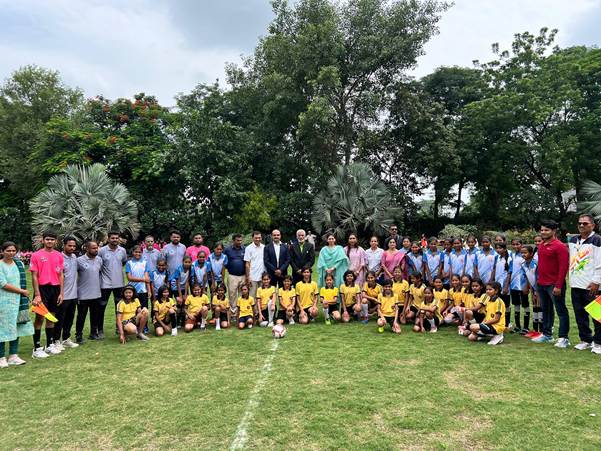
- 13 Aug 2025
In News:
The Khelo India ASMITA Football League 2025-26 was inaugurated in Jalgaon, Maharashtra, by the Minister of State for Youth Affairs & Sports, Raksha Khadse. The initiative is a key step in promoting gender-inclusive sports participation and empowering women athletes at the grassroots level.
About ASMITA
- Full form: Achieving Sports Milestone by Inspiring Women Through Action (ASMITA).
- Launched: 2021, under Khelo India.
- Nodal Ministry: Ministry of Youth Affairs and Sports.
- Support: Sports Authority of India (SAI), National Sports Federations, AIFF, WIFA, and other stakeholders.
- Component of: Khelo Bharat Niti – promoting sports as a tool for nation-building and empowerment.
Objectives
- Affirmative action to increase women’s participation in sports.
- Provide grassroots platforms for talent discovery, especially among tribal and minority communities.
- Create opportunities for young girls, addressing historical imbalances in sports.
- Help women challenge stereotypes and emerge as role models.
Key Features
- Inclusive Participation: From first-time players to hidden talent, ensuring wide outreach.
- Talent Identification: Leagues used as scouting grounds for future athletes.
- Scale: In FY 2025-26, 852 leagues are planned across 15 sports disciplines, targeting 70,000+ women athletes in all States/UTs.
- Age Focus: Leagues cover multiple categories, including U-13 and above.
- Institutional Backing: Supported by SAI and National Sports Federations to ensure professional management.
Significance
- Promotes women’s empowerment through sports.
- Strengthens grassroots sports ecosystem.
- Contributes to India’s vision of becoming a global sporting powerhouse with equal female participation.
- Aligns with the government’s philosophy of “Sabka Saath, Sabka Vikas.”
Revised Income Tax Bill, 2025
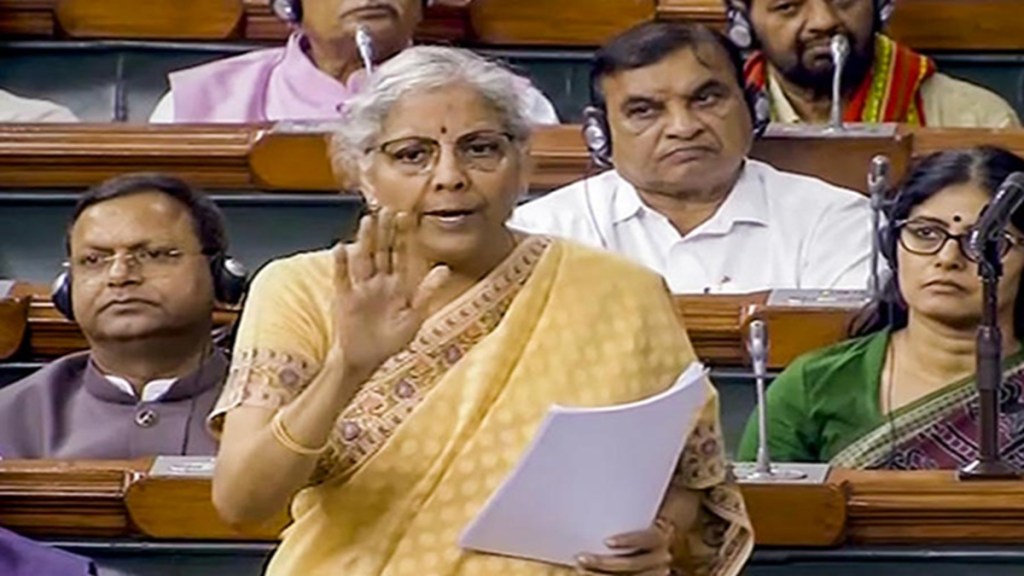
- 13 Aug 2025
In News:
The Income Tax (No. 2) Bill, 2025 was passed in the Lok Sabha in August 2025, replacing the Income Tax Act, 1961 after nearly six decades. The earlier draft of the Bill was withdrawn to incorporate recommendations of the Parliamentary Select Committee and stakeholder feedback. The revised Bill consolidates, simplifies, and modernises India’s direct tax framework.
Background
- Old Act (1961): Complex language, overlapping provisions, and compliance burden.
- New Bill (2025):
- Contains 536 sections and 16 schedules.
- Incorporates over 285 recommendations of the Select Committee, which examined the draft for four months and submitted a 4,500-page report.
- Aims to make the law simpler, clearer, and more aligned with the digital era.
Key Features
- Simplification of Tax Framework
- Single “Tax Year” concept replaces “Previous Year” and “Assessment Year”.
- Outdated and contradictory provisions removed to reduce litigation.
- Clear drafting, structured numbering, and improved terminology for easier interpretation.
- Taxpayer-Friendly Provisions
- Refunds allowed even if returns are filed after the due date.
- NIL-TDS certificates available for taxpayers with no liability.
- Relief on vacant house property – no taxation on notional rent.
- 30% standard deduction (post municipal tax) and interest deduction allowed on rented property.
- Corporate and MSME Reforms
- ?80M deduction on inter-corporate dividends reintroduced.
- MSME definition aligned with the MSME Act for uniformity.
- Institutional & Governance Reforms
- CBDT empowered for flexible, digital-era rule-making.
- Simplified compliance for TDS, PF withdrawals, advance rulings, and penalties.
- Relief to Specific Sectors
- Alternate Minimum Tax (AMT) on LLPs abolished.
- Charitable Trusts – compliance relaxations and reduced regulatory burden.
- Transfer Pricing & Associated Enterprise definitions rationalised.
- Extension of pension benefits – commuted pension deduction available even for non-employee individuals.
World Elephant Day 2025
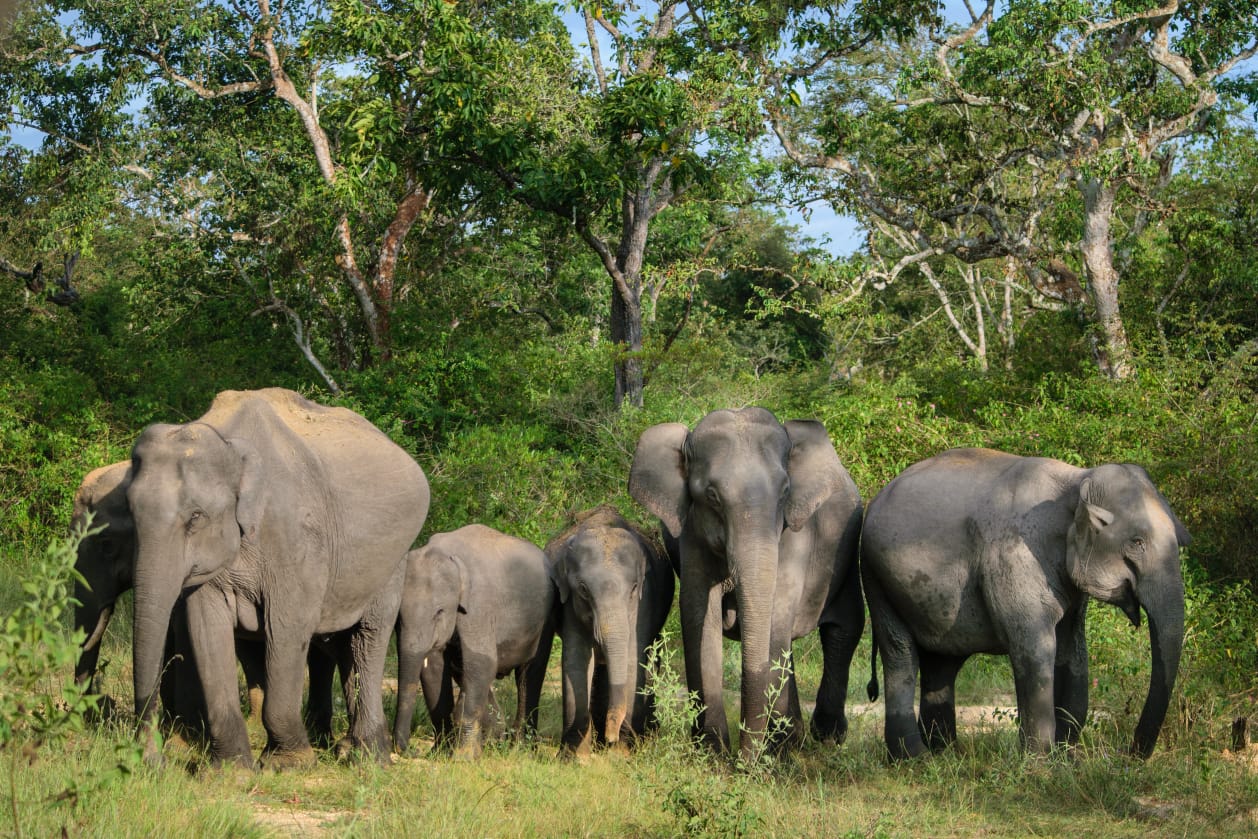
- 13 Aug 2025
In News:
World Elephant Day 2025 was celebrated on August 12 in Coimbatore, Tamil Nadu, organised by the Ministry of Environment, Forest and Climate Change (MoEF&CC) in collaboration with the Tamil Nadu Forest Department. The event focused on human–elephant conflict (HEC) mitigation and reaffirmed global commitment to elephant conservation.
About World Elephant Day
- Launched in 2012 by Patricia Sims (Canada) and the Elephant Reintroduction Foundation of Thailand.
- Aims to promote conservation of elephants, raise awareness on threats like habitat loss, poaching, and HEC, and encourage human–elephant coexistence.
Elephants in India
- India holds 60% of the global wild elephant population.
- 33 Elephant Reserves and 150 Elephant Corridors (as per 2023 Report).
- Elephants are recognised as National Heritage Animal of India.
- Legal and institutional backing provided through Project Elephant (1992), Wildlife Protection Act, and corridor conservation measures.
Human–Elephant Conflict (HEC)
- Rising incidents of elephants entering human settlements due to habitat loss, fragmentation, and search for food/water.
- The Coimbatore workshop under World Elephant Day 2025 brought together policymakers, foresters, conservationists, and civil society to share best practices.
- Measures discussed: habitat management, corridor maintenance, awareness campaigns, and capacity building in high-conflict areas.
- Focus on balancing wildlife conservation with human safety through community participation and scientific approaches.
Public Participation
- 12 lakh students from 5,000 schools across India joined awareness programmes.
- Citizen outreach emphasised coexistence, youth engagement, and long-term behavioural change in society.
Conservation Status (IUCN Red List)
- Asian Elephant (Elephas maximus): Endangered.
- African Savanna Elephant (Loxodonta africana): Endangered.
- African Forest Elephant (Loxodonta cyclotis): Critically Endangered.
Ecological Importance of Elephants
- Keystone species: maintain grasslands, disperse seeds, create water holes, and support biodiversity.
- Social structure: Matriarch-led herds with strong communal care for calves; males often solitary or in small groups.
- Long gestation (22 months) and slow reproduction make them vulnerable to population decline.
Jal Jeevan Mission (JJM)
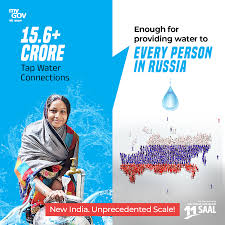
- 13 Aug 2025
In News:
The Jal Jeevan Mission (JJM), launched in August 2019, aims to provide Functional Household Tap Connections (FHTCs) to every rural household, ensuring safe, adequate, and regular potable water supply. At the time of its launch, only 17% of rural households (3.23 crore) had tap water access. As of 14 August 2025, this has increased to 81% coverage (15.68 crore households) out of a total 19.36 crore rural households, with over 12.45 crore additional connections provided.
Institutional Framework
- State Subject: Drinking water supply is primarily the responsibility of States/UTs, while the Centre provides technical and financial support.
- Funding: An initial outlay of ?2,08,652 crore was approved; the scheme has now been extended until 2028 with enhanced allocation for completing pending works and strengthening Operation & Maintenance (O&M).
- Citizen Participation: The 2025 Budget emphasized “Jan Bhagidari” for sustainable and community-centric water service delivery.
Quality Standards and Monitoring
- Benchmark: Water quality is mandated to comply with BIS:10500 standards, which specify acceptable and permissible limits for chemical, physical, and bacteriological parameters.
- Testing: In December 2024, the government released a Concise Handbook for States/UTs, recommending comprehensive testing at multiple points—source, treatment plant, storage, and distribution.
- Remedial Actions: Include regular cleaning of overhead tanks and corrective measures in case of contamination.
- Transparency Tools:
- JJM Dashboard “Citizen Corner” displays village-level water test results.
- Complaints can be filed via CPGRAMS (pgportal.gov.in) and the Department’s website (jalshakti-ddws.gov.in).
- Aadhaar-linked monitoring, geo-tagging, IoT sensors, and third-party inspections are employed for real-time tracking.
Significance
- Public Health: Ensures safe drinking water, reducing the burden of waterborne diseases.
- Gender Empowerment: Frees women and girls from time-consuming water collection, enabling better education and livelihoods.
- Rural Development: Improves quality of life, reduces drudgery, and enhances rural productivity.
- Sustainability: Integrates with groundwater management initiatives like the Atal Bhujal Yojana, promoting long-term water security.
Current Status (2025)
- Coverage: 81% rural households have tap water supply.
- Target: Universal coverage by 2028 with a focus on infrastructure quality, O&M, and sustainable, citizen-driven service delivery.
Supreme Court orders immediate removal of stray dogs from Delhi-NCR streets
- 13 Aug 2025
In News:
The Supreme Court of India has directed the immediate removal of all free-ranging dogs from Delhi, Noida, Gurugram, and Ghaziabad. The Court emphasized permanent relocation of these animals to shelters, citing rising incidents of rabies and dog bites, particularly affecting children and vulnerable groups.
Key Features of the Order
- Complete Removal: All stray dogs are to be captured to ensure “stray-free” streets in urban and peri-urban areas.
- No-Release Policy: Unlike the earlier Animal Birth Control (ABC) approach, captured dogs will not be returned to their original localities but retained in shelters.
- Shelter Infrastructure: Authorities must build facilities capable of housing at least 5,000 dogs within eight weeks, prioritizing high-risk localities.
- Emergency Response: A 24×7 helpline with a four-hour response time is mandated to tackle bite incidents.
- Strict Compliance: Interference with the process will attract contempt of court, ensuring accountability.
Rationale Behind the Order
- Public Health Priority: With nearly 5,700 rabies-related deaths annually (95% from dog bites), the order seeks to directly curb a preventable disease.
- Protection of Vulnerable Groups: Children and the elderly face higher risks due to limited self-defence capacity.
- Policy Ineffectiveness: The sterilisation-centric ABC model has not adequately addressed aggressive or rabies-carrying dogs.
- Constitutional Angle: By invoking Article 21 (Right to Life and Liberty), the Court underlined safe mobility and freedom from fear in public spaces.
- Permanent Reform: A structural shift from temporary containment to long-term removal from public areas.
Arguments in Favour
- Public Safety: A direct life-saving intervention against rabies deaths.
- Constitutional Backing: Strengthens the right to security under Article 21.
- Urban Governance: Integrates sanitation and safety into city management.
- Accountability: Surveillance and records ensure transparency in enforcement.
- Policy Gaps Addressed: Closes loopholes of the ABC model by ending return-to-locality practices.
Concerns and Counter-Arguments
- Legal Conflict: The directive may clash with existing ABC Rules framed under the Prevention of Cruelty to Animals Act.
- Animal Welfare: Overcrowded shelters risk inhumane conditions, raising ethical concerns.
- Ecological Impact: Sudden removal could disrupt rodent control and waste management functions performed by strays.
- Risk of Abuse: Lack of monitoring might lead to covert culling under the guise of relocation.
- Rights-Based Critique: May be seen as undermining the intrinsic rights of animals and compassion-based governance.
Way Forward
- Humane Shelter Models: Ensure adequate space, veterinary care, and nutrition.
- Mass Vaccination Drives: Combine removal with preventive health measures to eradicate rabies.
- Adoption and Community Participation: Promote responsible adoption under strict guidelines.
- Policy Harmonisation: Amend ABC Rules to align with SC directions and resolve legal inconsistencies.
- Awareness and Behavioural Change: Community-level campaigns on rabies prevention and civic responsibility.
Conclusion
The Supreme Court’s intervention highlights the tension between public health imperatives and animal welfare ethics. While it seeks to secure citizens’ right to safe public spaces, it also raises concerns of legality, humane treatment, and ecological balance. Going forward, the challenge lies in striking a balance between constitutional morality (right to life) and compassion ethics (animal welfare) through coherent policy design and ethical urban governance.
Biofortified Potatoes
- 12 Aug 2025
In News:
India is intensifying efforts to combat micronutrient deficiencies and enhancenutritional security by introducing biofortified potatoes with enhanced iron content. These varieties, developed by the International Potato Center (CIP), Peru, are being adapted for Indian conditions in collaboration with the ICAR–Central Potato Research Institute (CPRI), Shimla.
What are Biofortified Potatoes?
- Definition: Specially bred potatoes enriched with higher levels of iron, zinc, and vitamin C compared to conventional varieties.
- Objective: Address iron deficiency anemia and “hidden hunger” without compromising yield or taste.
- Development: CIP has released iron-rich potato varieties in Peru, now under evaluation and seed multiplication for Indian farmers.
Sweet Potatoes with Vitamin A
- Biofortified Sweet Potatoes with high beta-carotene (Vitamin A precursor) are already cultivated in Odisha, West Bengal, Karnataka, and Assam.
- Their bright orange flesh indicates nutritional richness, helping prevent night blindness, strengthen immunity, and improve child growth.
- ICAR-CTCRI’s SP-95/4 variety combines high beta-carotene with good yield, enhancing tribal nutrition.
- Advantages: Long shelf life (up to 2 years without refrigeration), versatile in food preparation, and suitable for Mid-Day Meal and nutrition schemes.
Institutional Initiatives
- CIP South Asia Regional Centre is being set up in Agra, Uttar Pradesh, within the Indo-Gangetic Plains – the world’s largest potato-producing region – to strengthen R&D and seed access.
- ICAR’s Wider Biofortification Drive:
- Released 61 biofortified crop varieties, including 34 field crops (cereals, pulses, millets, oilseeds) and 27 horticultural crops (tubers, vegetables, medicinal plants).
- Examples:
- CR Dhan 416: Salinity-resistant rice with pest resistance.
- Durum Wheat: Rich in zinc (41.1 ppm), iron (38.5 ppm), and 12% protein.
Biofortification: Concept and Importance
- Definition: Enhancing the nutrient content of crops through conventional breeding, agronomic practices, or biotechnology while preserving consumer-preferred traits.
- Examples:
- Iron-rich: Rice, beans, sweet potato, cassava, legumes.
- Zinc-rich: Wheat, rice, maize, beans.
- Vitamin A-rich: Sweet potato, maize, cassava.
- Protein/amino acid-rich: Sorghum, cassava.
Significance for India
- Public Health: Addresses widespread iron deficiency anemia, especially among women and children.
- Agricultural Sustainability: Promotes nutritionally dense crops without heavy reliance on supplements.
- Policy Alignment: Supports PoshanAbhiyaan, Mid-Day Meal Scheme, and SDG 2 (Zero Hunger).
- Economic Benefits: Enhances farmer incomes by creating demand for nutrient-rich crops.
MERITE Scheme
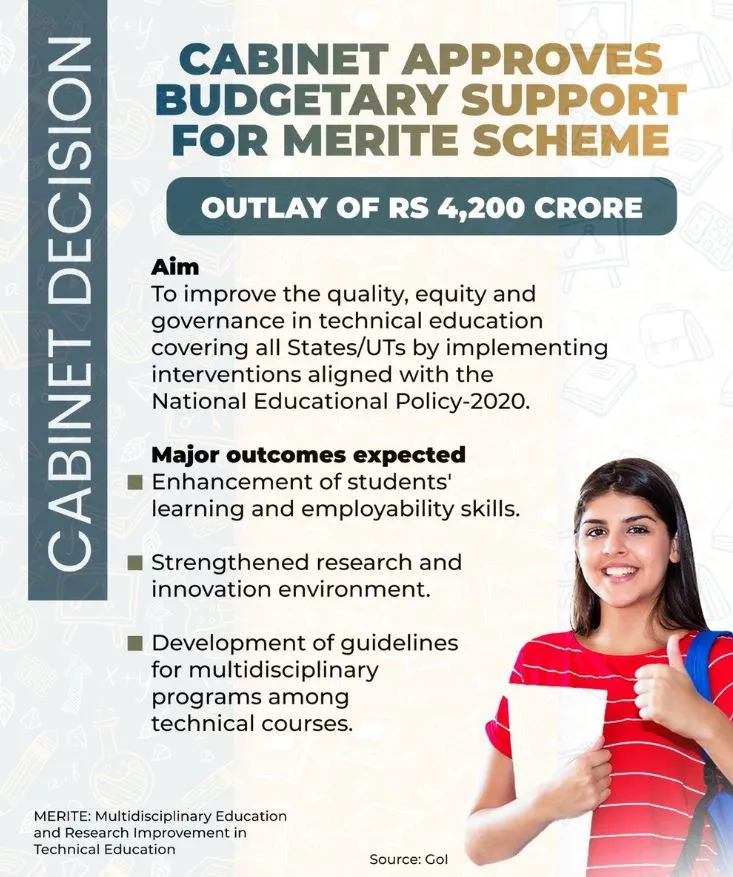
- 12 Aug 2025
In News:
The Union Cabinet has approved the Multidisciplinary Education and Research Improvement in Technical Education (MERITE) Scheme with a total outlay of ?4,200 crore (2025–26 to 2029–30). This includes ?2,100 crore World Bank loan assistance. The scheme seeks to transform India’s technical education landscape in line with the National Education Policy (NEP), 2020.
Coverage
- Institutions: 275 government/government-aided technical institutions (175 engineering institutions + 100 polytechnics).
- Beneficiaries: Around 7.5 lakh students across all States and Union Territories.
- Stakeholders: National Institutes of Technology (NITs), State Engineering Institutions, Affiliating Technical Universities (ATUs), with implementation support from IITs, IIMs, AICTE, and NBA.
Objectives
- Improve quality, equity, and governance in technical education.
- Align curricula with labour market requirements.
- Strengthen the research and innovation ecosystem.
- Support State/UT technical education departments in digitalization and quality assurance.
Key Focus Areas
- Digital Transformation: ICT-enabled learning, blended teaching models.
- Multidisciplinary Programs: Introduction of NEP-2020 aligned technical courses.
- Skill & Employability Enhancement: Internships, industry-linked curricula, language labs, skill/maker labs.
- Research and Innovation: Establishing research hubs, incubation centres, innovation labs.
- Faculty & Governance: Faculty development programs, creation of academic administrators with focus on women leadership.
- Accreditation & Quality Assurance: Strengthening institutional governance and accountability.
Expected Outcomes
- Increased student employability and higher placement rates.
- Improved research output and innovation ecosystem.
- Greater equity and inclusion in technical education, with emphasis on reducing gender gaps and digital divide.
- Enhanced global competitiveness of Indian technical institutions.
Employment Generation Impact
By modernising technical education and strengthening linkages with industry, MERITE is expected to:
- Improve fresh graduates’ placement prospects.
- Foster entrepreneurship through incubation and innovation centres.
- Contribute to reducing unemployment among engineering graduates.
Background and Significance
India’s sustainable and inclusive growth hinges on technological advancement, which demands upgraded academic and research standards. MERITE builds upon NEP-2020 reforms such as curriculum revamp, skill development, interdisciplinary learning, and enhanced governance. Importantly, it integrates global expertise through the World Bank partnership.
The scheme also ensures participatory governance, incorporating feedback from States/UTs during policy design, thereby strengthening cooperative federalism in higher education reform.
Global Risk of Zoonotic Diseases and India’s Preparedness
- 12 Aug 2025
In News:
A recent study published in Science Advances has highlighted that over 9.3% of the world’s land surface is at high (6.3%) or very high (3%) risk of zoonotic outbreaks — diseases transmitted between animals and humans. About 3% of the global population lives in extremely high-risk areas, while nearly 20% live in medium-risk zones.
The study introduced a Global Epidemic Risk Index, combining country-specific zoonotic risk factors with national preparedness capacities, to help policymakers strengthen health systems, allocate resources effectively, and enhance global cooperation.
Disease Burden and Examples
- Zoonotic diseases account for 60% of all known infectious diseases and up to 75% of emerging infectious diseases (EIDs).
- Globally, they cause 2.5 billion cases and 2.7 million deaths annually.
- Examples: Rabies, anthrax, influenza (H1N1, H5N1), Nipah virus, brucellosis, tuberculosis, Ebola, SARS, MERS, and Covid-19.
Drivers of Spillover Events
- Climate Change: Rising temperatures, erratic rainfall, and water scarcity heighten risks by altering habitats and vector distribution.
- Land Use Change: Deforestation, urban expansion, and agricultural intensification increase human–animal contact.
- Transmission Routes:
- Direct (e.g., avian influenza)
- Food-borne (e.g., salmonella)
- Vector-borne (e.g., West Nile virus)
- Water-borne (e.g., cryptosporidiosis)
Regional Vulnerabilities
- Latin America: 27% of land at high risk
- Oceania: 18.6%
- Asia: 7%
- Africa: 5%
India’s Vulnerability
- An ICMR study (2018–23) found that 8.3% of all reported outbreaks (583 of 6,948) were zoonotic.
- Outbreaks peaked during June–August, linked to monsoon-driven ecological changes.
- The Northeast region accounted for 35.8% of reported zoonotic outbreaks.
India’s Initiatives
- National Animal Disease Control Programme (NADCP): Mass vaccination to eliminate Foot & Mouth Disease (FMD) and Brucellosis.
- Target: Control FMD by 2025 and eradicate by 2030.
- National One Health Programme for Prevention and Control of Zoonoses (2013): Integrated surveillance and inter-sectoral coordination.
- Animal Birth Control (Dogs) Rules, 2023: Rabies vaccination and sterilisation of stray dogs.
- Rabies Vaccination under ASCAD (Livestock Health & Disease Control Programme).
Global Initiatives
- Zoonotic Disease Integrated Action (ZODIAC): Launched by IAEA (2020) for early detection and rapid response.
- World Zoonoses Day (6 July): Marks Louis Pasteur’s rabies vaccine in 1885.
- G20 Pandemic Fund: Financial support for strengthening preparedness and response.
- Global Early Warning System (GLEWS): A WHO–FAO–WOAH collaboration for coordinated zoonotic disease surveillance.
One Health Approach
The One Health framework recognizes the interconnectedness of human, animal, and environmental health. It promotes collaborative, multisectoral strategies for sustainable disease prevention and response.
Rhisotope Project
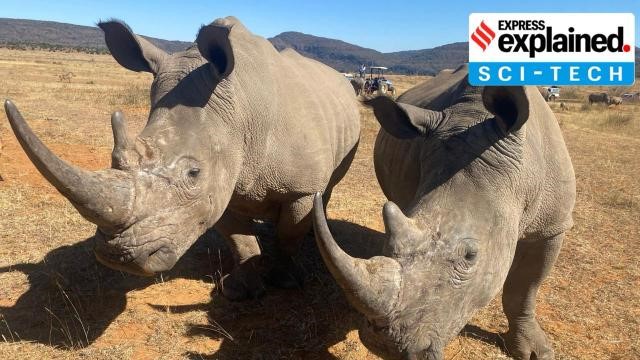
- 12 Aug 2025
In News:
South Africa, which shelters the world’s largest rhino population, has lost over 10,000 rhinos in the last decade to poaching driven by the illegal horn trade in Asian markets. To counter this crisis, the University of the Witwatersrand, in collaboration with the International Atomic Energy Agency (IAEA), has launched the Rhisotope Project (2024) — a novel initiative using radioactive isotopes to protect rhinos.
What is the Rhisotope Project?
- A non-invasive procedure where rhino horns are injected with low doses of radioisotopes.
- The process is harmless to rhinos but makes horns:
- Detectable through Radiation Portal Monitors (RPMs) and scanners at borders, ports, and airports — even in sealed shipping containers.
- Toxic and unfit for human use, reducing demand in illegal trade.
- Pilot studies (2024–25):
- 20 rhinos in the Waterberg Biosphere Reserve were treated.
- Tests by Ghent University (Belgium) showed no cellular damage or health impact.
- 3D-printed horns used in trials confirmed detectability in container loads.
Why Radioisotopes?
- Radioisotopes are unstable forms of elements that emit ionising radiation (alpha, beta, gamma) to achieve stability.
- They are easily traceable with nuclear detection systems.
- Already widely used in medicine (I-131 for thyroid, Tc-99m for imaging), archaeology (C-14 dating), and industry.
The Scale of the Crisis
- Global rhino numbers: Declined from ~5,00,000 in the early 20th century to ~27,000 today (IUCN).
- South Africa: Lost 103 rhinos to poaching in the first quarter of 2025 alone.
- Conventional measures like dehorning reduce poaching but disrupt rhino social behaviour and habitat use. The Rhisotope Project offers a less disruptive alternative.
Broader Conservation Significance
- If successful, the method could be extended to other endangered species like elephants and pangolins.
- It represents an international collaboration that combines nuclear science with wildlife conservation, redefining the role of technology in biodiversity protection.
Threats Beyond Poaching
- Invasive species: Plants like Parthenium threaten habitats (e.g., Assam’s Pobitora Wildlife Sanctuary, home to the densest one-horned rhino population).
- Climate change: Intensified droughts and monsoons push rhinos into human-dominated landscapes, increasing conflicts.
- Habitat loss due to agricultural expansion and human settlement.
Rhino Conservation Initiatives
- Global/Regional:
- New Delhi Declaration on Asian Rhinos (2019)
- DNA Profiling of all Rhinos for tracking and protection
- India-specific:
- National Rhino Conservation Strategy
- Indian Rhino Vision 2020 (for Assam’s one-horned rhinos)
About the IAEA
- Established in 1957 as the UN’s “Atoms for Peace”organisation.
- Promotes peaceful applications of nuclear technology while preventing misuse for weapons.
- 178 member states; India is a founding member.
- Awarded the 2005 Nobel Peace Prize for contributions to nuclear safety and disarmament.
- HQ: Vienna, Austria. Reports to both UNGA and UNSC.
National Narcotics Helpline MANAS
- 12 Aug 2025
In News:
The Government of India launched the National Narcotics Helpline MANAS (Madak-PadarthNishedAsoochna Kendra) to strengthen citizen participation in the fight against the drug menace. The initiative, spearheaded by the Narcotics Control Bureau (NCB) under the Ministry of Home Affairs (MHA), functions as a secure, bilingual, and citizen-centric platform to enable anonymous reporting of drug trafficking, illicit cultivation, and related crimes, while also providing counselling and rehabilitation support.
Key Features of MANAS
- Helpline Number: 1933 (Toll-Free)
- Digital Access: Web portal (www.ncbmanas.gov.in), Email (info.ncbmanas@gov.in), and UMANG Mobile App
- Integration: Direct transfer to the MoSJE De-addiction Helpline (14446) for rehabilitation guidance
- Awareness Outreach: Posters, videos, contests, and citizen engagement through MyGov platform under the Drug-Free Bharat campaign
India’s Legal & Policy Framework Against Drug Abuse
- Constitutional Backing: Article 47 directs the State to prohibit intoxicating substances except for medicinal purposes.
- Legislation:
- Narcotic Drugs and Psychotropic Substances (NDPS) Act, 1985
- Prevention of Illicit Traffic in NDPS Act, 1988
- Drugs and Cosmetics Act, 1940
- International Conventions: India is party to the
- Single Convention on Narcotic Drugs, 1961 (amended 1972)
- Convention on Psychotropic Substances, 1971
- UN Convention against Illicit Traffic in Narcotic Drugs and Psychotropic Substances, 1988
- Other Initiatives: NIDAAN Portal (for drug law offenders), NashaMukt Bharat Abhiyan (community-based de-addiction programme).
Significance for Governance & Society
The MANAS helpline marks a shift from enforcement-centric approaches to a citizen-participatory, tech-enabled model. It bridges law enforcement, rehabilitation, and public awareness, reflecting India’s commitment to a balanced supply and demand reduction strategy against narcotics.
World Lion Day 2025
- 11 Aug 2025
In News:
India celebrated World Lion Day 2025 at Barda Wildlife Sanctuary, Gujarat, marking a milestone in wildlife conservation. The event highlighted the success of Project Lion, launched by Prime Minister Narendra Modi on 15th August 2020, and underscored India’s global leadership in protecting the endangered Asiatic Lion (Panthera leopersica).
Status of Asiatic Lions
- Population Growth: Numbers rose from 284 in 1990 to 674 in 2020, and further to 891 in 2025(16th Lion Census). This reflects a 32% increase since 2020 and 70% rise over the last decade.
- Distribution: The lions roam across ~35,000 sq. km in 11 districts of Saurashtra, with Gir National Park as the core habitat. In recent years, Barda Wildlife Sanctuary (192 sq. km) has emerged as a second home, hosting 17 lions including 11 cubs.
- Global Significance: If Asiatic lions survive anywhere today, it is solely in India—making their conservation a matter of both ecological and national pride.
Ecological and Cultural Importance
- Apex Predators: Regulate herbivore populations, prevent overgrazing, and maintain ecosystem balance.
- Cultural Symbolism: Depicted on the National Emblem and Indian currency, symbolizing strength and heritage.
- Unique Traits: Asiatic lions are smaller than African lions, with a distinct belly fold and less prominent mane (ears remain visible).
Conservation Measures
1. Project Lion (2020–2030)
- Budget: ?2,927 crore sanctioned.
- Focus Areas:
- Habitat improvement and prey base augmentation.
- Scientific monitoring using GPS, GIS-based real-time surveillance, and automated sensor grids.
- Veterinary healthcare (National Referral Centre at Junagadh).
- Human–wildlife conflict mitigation.
- Community participation and eco-tourism.
2. Greater Gir Concept: Expands protected landscapes toGirnar, Pania, Mitiyala, and Bardasanctuaries to reduce habitat pressure.
3. Recent Developments
- ?180 crore wildlife and ecotourism initiative launched in 2025 for new habitats, safari park, and veterinary facilities.
- Barda Safari Park & Zoo approved to boost ecotourism and conservation.
- Return of lions to Barda after 143 years, enhancing biodiversity and eco-tourism potential.
4. Global Cooperation
- International Big Cats Alliance (IBCA, 2023): A platform of 97 countries for sharing knowledge and resources on big cat conservation.
Conservation Status
- Panthera leo (Lion)IUCN Red List: Vulnerable (Green Status: Largely Depleted).
- CITES: Appendix I.
- Wildlife (Protection) Act, 1972: Schedule I species.
- Part of India’s Species Recovery Programme under the Centrally Sponsored Scheme – Development of Wildlife Habitat.
India’s 3rd Launch Pad in Sriharikota by 2029
- 11 Aug 2025
In News:
India’s space programme is set for a major expansion with the Third Satellite Launch Pad (TLP) being developed at the Satish Dhawan Space Centre (SDSC), Sriharikota. The facility, sanctioned in March 2025, is expected to be fully operational by March 2029, significantly strengthening India’s ability to handle next-generation launch vehicles (NGLV) and ambitious human spaceflight missions.
Development Timeline and Infrastructure
The TLP project has been structured with clear milestones:
- Civil works: by May 2028
- Fluid and propellant storage systems: by July 2028
- Launch pad systems: by September 2028
- Commissioning: by March 2029
Preliminary geotechnical investigations and topographic surveys were completed in May 2025. Currently, tenders for essential road, electrical, and infrastructure works are under evaluation.
Objectives and Capabilities
- Support NGLV Operations: The 91-metre-tall Next Generation Launch Vehicle, designed with semi-cryogenic stages, will have a payload capacity of up to 30 tonnes to Low Earth Orbit (LEO)—a major leap from existing LVM3 capabilities.
- Backup for LVM3: Ensures continuity of operations in case of single-pad disruption.
- Enable Human Spaceflight: Provides critical infrastructure for the Gaganyaan mission, future astronaut flights, and crewed lunar landing plans by 2040.
- Facilitate Deep-Space Missions: Supports long-term goals like BharatiyaAntariksh Station (2035), lunar missions, and interplanetary exploration.
Key Features
- Advanced Propellant Systems: Compatible with cryogenic and semi-cryogenic fuels with higher thrust requirements.
- New Jet Deflection Systems: Built to withstand the powerful thrust of next-gen rockets.
- Make-in-India Integration: Emphasis on collaboration with private industry and MSMEs, ensuring maximum indigenous participation in design, construction, and manufacturing.
- Modular Construction: Use of multiple work packages for efficient execution.
- Increased Launch Capacity: Enhances frequency, redundancy, and capability to handle commercial as well as strategic missions.
Strategic Significance
- Redundancy and Reliability – Reduces dependence on two existing pads, mitigating risks of delays due to maintenance or failure.
- Future-Proofing India’s Space Infrastructure – Specifically designed for larger payloads, human-rated systems, and next-gen propulsion.
- Boost to Space Economy – By enabling frequent and diverse launches, TLP supports India’s rising commercial space sector under the Make-in-India and Atmanirbhar Bharat initiatives.
- Geopolitical Leverage – Strengthens India’s position in the global space economy, catering to both domestic and international clients.
Diabetes in India

- 11 Aug 2025
In News:
A Lancet Global Health study (2023), based on the Longitudinal Aging Study in India (LASI), has highlighted the alarming rise of diabetes among Indians aged 45 years and above. The findings underscore the urgent need for universal screening, awareness, and improved management strategies to address this public health challenge.
Key Findings of the Study
- Prevalence: One in five Indians aged 45+ (approx. 20%) had diabetes in 2019.
- Undiagnosed Diabetes: Nearly 40% of people with diabetes were unaware of their condition—around 20 million Indians remain undiagnosed.
- Treatment Gaps:
- 5% had untreated diabetes.
- 47% were under-treated.
- Only 36% were adequately treated.
- Awareness and Treatment: Once aware, 94% of patients sought treatment, highlighting the impact of diagnosis.
- Control Rates:
- 46% achieved blood sugar control,
- 59% achieved blood pressure control,
- 6% used lipid-lowering medicines.
- Urban-Rural Divide: Urban prevalence (30%) was nearly double that of rural areas (15%).
- Gender Gap: Prevalence was similar in men (19.6%) and women (20.1%).
- Regional Trends:
- Highest rates: Chandigarh (36.9%), Kerala (36%), Puducherry (36%).
- Largest number of diabetics: Tamil Nadu (6.1 mn), Maharashtra (5.8 mn), Uttar Pradesh (4.7 mn).
- Methodology: Diagnosis based on HbA1c testing (3-month blood sugar average), more accurate than random glucose tests used in earlier surveys.
Understanding Diabetes
- Type 1: Autoimmune; body destroys insulin-producing cells. Requires lifelong insulin.
- Type 2: Accounts for 95%+ of cases; due to insulin resistance or inadequate production; linked to obesity, sedentary lifestyle, and genetics. Preventable via lifestyle changes.
- Gestational Diabetes: Occurs during pregnancy; increases risk of complications and later Type 2 diabetes.
- Type 5 (Newly Recognized): Seen in lean adolescents (BMI < 18.5 kg/m²); caused by malnutrition damaging pancreatic beta cells, leading to insulin deficiency.
India’s Policy and Programmatic Response
- Ayushman Arogya Mandirs (Health and Wellness Centres): Provide population-based diabetes screening.
- Fit India Movement: Encourages preventive health and fitness practices.
- School Interventions: CBSE mandates ‘sugar boards’ to educate students about hidden sugars and health risks.
- National Programme for Prevention and Control of Cancer, Diabetes, Cardiovascular Diseases and Stroke (NPCDCS): Strengthens NCD screening and management across primary healthcare.
RBI’s Internal Working Group Recommendations on Liquidity Management Framework
- 11 Aug 2025
In News:
The Reserve Bank of India (RBI) recently released the recommendations of its Internal Working Group (IWG) constituted to review the Liquidity Management Framework (LMF), which has been operational since February 2020. The review seeks to enhance efficiency, transparency, and predictability in liquidity operations—crucial for ensuring smooth monetary policy transmission.
Liquidity Management Framework (LMF):
- Objective: To manage systemic liquidity and guide short-term interest rates in alignment with monetary policy objectives.
- Core Mechanism: Operates through the Liquidity Adjustment Facility (LAF)—using repo (liquidity injection) and reverse repo (liquidity absorption) operations.
- Corridor System: The policy repo rate sits at the middle of the interest rate corridor, while the Weighted Average Call Rate (WACR) serves as the operating target of monetary policy.
- Other Tools: Open Market Operations (OMO), Cash Reserve Ratio (CRR), Statutory Liquidity Ratio (SLR) for durable liquidity; and Standing Deposit Facility (SDF) for absorbing surplus liquidity.
Key Recommendations of the IWG
- WACR as Operating Target
- Recommendation: Continue using overnight WACR as the operating target.
- Rationale: WACR strongly correlates with collateralized overnight money market rates, making it reliable for transmitting policy signals across the system.
- Discontinuation of 14-day VRR/VRRR as Main Operation
- Recommendation: Replace 14-day Variable Rate Repo/Reverse Repo (VRR/VRRR) as the main liquidity management tool.
- Alternative: Manage transient liquidity primarily through 7-day repo/reverse repo operations and other operations (overnight to 14-day tenor) at RBI’s discretion.
- Rationale: 14-day auctions have witnessed lower participation, as banks prefer shorter-tenor instruments like SDF.
- Advance Notice for Liquidity Operations
- Recommendation: RBI should provide at least one-day advance notice for repo/reverse repo operations.
- Exception: Same-day operations may be undertaken in response to evolving liquidity shocks.
- Rationale: Predictability reduces market uncertainty and stabilizes money market rates.
- Variable Rate Auction Mechanism
- Recommendation: Continue using variable rate auctions for repo and reverse repo operations, including longer tenors.
- Rationale: Enhances price discovery and aligns market rates with liquidity conditions.
- Cash Reserve Ratio (CRR) Norms
- Recommendation: Continue with the 90% daily minimum maintenance requirement of CRR.
- Rationale: Ensures banks maintain sufficient reserves, preventing liquidity shortfalls.
- Durable Liquidity Tools
- Observation: Existing instruments under the LMF are sufficient to meet durable liquidity needs; no changes are required at this stage.
Key Terms:
- WACR (Weighted Average Call Rate): The average overnight interest rate at which banks borrow and lend funds, weighted by transaction volume; RBI’s operating target for monetary policy.
- Repo Rate: Rate at which RBI lends to banks against collateral to inject liquidity.
- Reverse Repo Rate: Rate at which RBI borrows from banks to absorb excess liquidity.
- VRR/VRRR: Auction-based repo/reverse repo operations, where rates are determined by market bids.
- SDF (Standing Deposit Facility): Tool for absorbing liquidity without collateral.
- CRR (Cash Reserve Ratio): Portion of deposits banks must maintain with RBI as liquid cash.
Significance of Recommendations
- For Monetary Policy: Reinforces the role of WACR in aligning short-term rates with policy stance.
- For Markets: Enhances predictability, reducing volatility in money markets.
- For Banks: Offers greater flexibility in managing short-term liquidity needs.
- For RBI: Provides operational flexibility to balance stability with market efficiency.
TRISO Nuclear Fuel
- 11 Aug 2025
In News:
The United States Department of Energy (DOE) has selected Standard Nuclear as the first company to establish a domestic supply chain for TRi-structural ISOtropic (TRISO) nuclear fuel, marking a major step toward reducing dependence on Russian uranium and advancing nuclear innovation. The initiative, part of DOE’s Fuel Line Pilot Program (2025), is designed to strengthen US energy security, promote private sector participation, and accelerate the deployment of advanced nuclear reactors.
Why TRISO Matters
TRISO is a next-generation nuclear fuel specifically engineered for high-temperature gas-cooled reactors (HTGRs) and molten salt-cooled reactors, both of which fall under Generation IV (Gen-IV) advanced reactor designs.
- Composition: TRISO fuel consists of a uranium–carbon–oxygen fuel kernel encapsulated by three protective layers of carbon and ceramic materials.
- Form: The particles are extremely small—seed-sized—and can be fabricated into cylindrical pellets or “pebbles.”
- Key Features:
- Extreme durability: Resistant to neutron irradiation, corrosion, oxidation, and very high temperatures.
- Self-containment: Each particle acts as its own containment system, preventing radiation leakage even under extreme reactor conditions.
- Versatility: Compatible with multiple advanced reactor designs, including small modular reactors (SMRs).
This makes TRISO structurally and functionally superior to conventional nuclear fuels, ensuring safer, more reliable, and more efficient reactor performance.
Strategic Implications
- Energy Security & Supply Chains
- The US has historically relied on imports of enriched uranium, particularly from Russia.
- By developing domestic TRISO production in Tennessee and Idaho, the DOE seeks to build a resilient nuclear fuel ecosystem independent of geopolitical disruptions.
- Advanced Reactor Deployment
- DOE’s Advanced Reactor Demonstration Program targets at least three new advanced reactor designs to achieve criticality by July 4, 2026.
- TRISO fuel is central to this push, enabling safer operation of SMRs and Gen-IV reactors, both of which are crucial to America’s clean energy transition.
- Private–Public Partnership
- Standard Nuclear will finance construction, operation, and decommissioning of TRISO fabrication facilities.
- Reactor developers will source nuclear material feedstock, partly through DOE’s high-assay low-enriched uranium (HALEU) allocation program.
- Technological Momentum
- Other firms, such as BWX Technologies (BWXT), have also developed TRISO production lines, including uranium nitride TRISO, in collaboration with Idaho and Oak Ridge National Laboratories.
- These advancements reinforce US leadership in nuclear innovation while supporting its broader climate and national security goals.
Tuvalu’s Planned Climate Migration to Australia
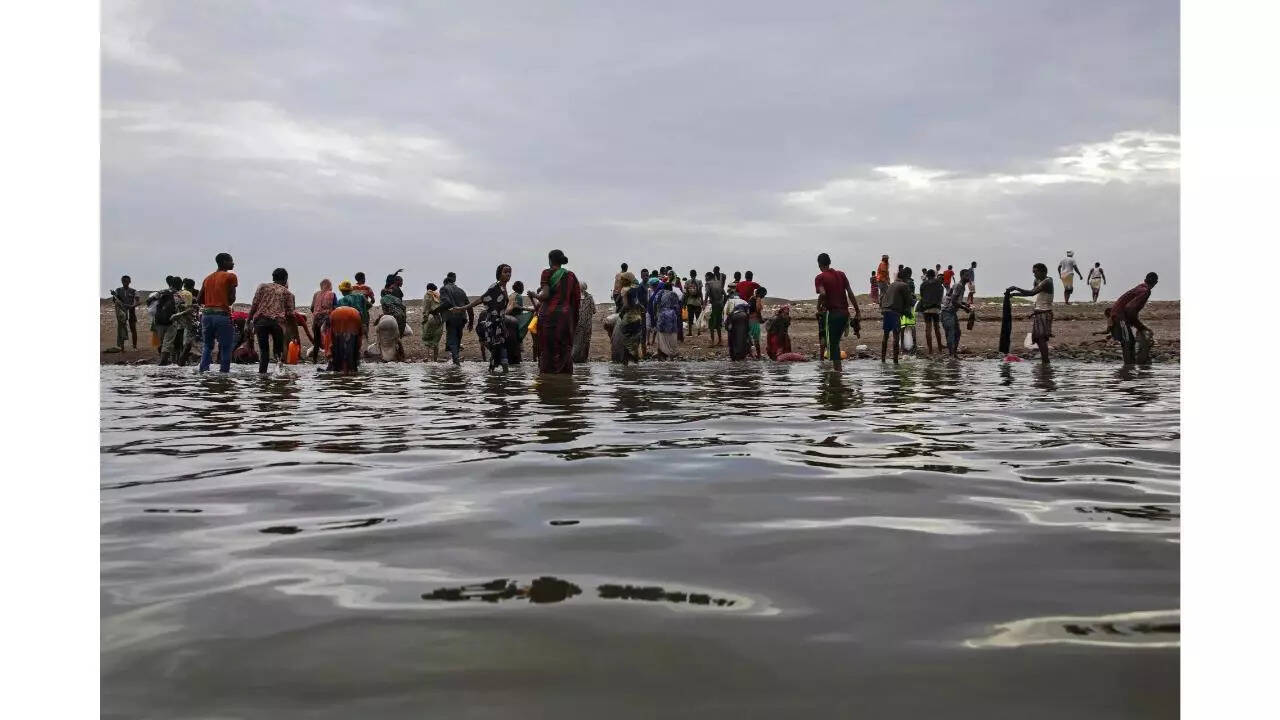
- 10 Aug 2025
In News:
Tuvalu, a small Pacific island nation, is undertaking the world’s first planned national migration due to the existential threat posed by climate change and rising sea levels. The initiative stems from the Falepili Union Treaty (2023) signed between Tuvalu and Australia, marking a landmark case in global climate governance and migration policy.
Why Migration is Needed
- Geography & Vulnerability: Tuvalu consists of nine coral atolls with a total land area of just 25.14 sq. km and a population of ~11,000 (2022 census). Its average elevation is only 2 metres, making it highly vulnerable to flooding, storm surges, and coastal erosion.
- Climate Impact:
- NASA’s Sea Level Change Team reported that sea levels in Tuvalu were already 15 cm higher in 2023 compared to the previous 30 years.
- At this rate, most of Tuvalu could be submerged by 2050.
- Two of its nine atolls are already largely underwater.
- Scientists warn the islands may become uninhabitable within 80 years.
The Falepili Union Treaty (2023)
- Migration Provision: Australia will grant 280 Tuvaluans permanent residency annually, with access to healthcare, education, housing, and employment.
- Selection Mechanism: Migration is ballot-based. The first phase (June–July 2025) saw 8,750 registrations. The first group of 280 migrants was selected on 25 July 2025.
- Scale: Along with other pathways to Australia and New Zealand, up to 4% of Tuvalu’s population could migrate annually. Within a decade, nearly 40% of the population may relocate, although some may return periodically.
- Objective: To ensure “mobility with dignity”, preventing Tuvaluans from becoming stateless climate refugees.
International Significance
- Precedent for Climate Migration: This is the first-ever state-backed relocation of an entire population due to climate change, setting a model for other vulnerable island nations.
- Global Climate Justice: Tuvalu’s case highlights the plight of Small Island Developing States (SIDS) and the urgent need for stronger international climate agreements.
- Diplomatic Signalling: Tuvalu’s Prime Minister Feleti Teo has called for a new global treaty safeguarding nations at risk from rising seas.
About Tuvalu
- Location: Polynesian island nation in the Pacific Ocean, midway between Australia and Hawaii.
- Capital: Funafuti.
- Population: ~11,000 (second least populous UN member after Vatican City).
- Economy: Relies on fishing licenses, foreign aid, and remittances from Tuvaluan seafarers.
- UN Membership: Since 2000; actively champions the rights of climate-vulnerable states.
India’s Joint Doctrines on Cyberspace and Amphibious Operations
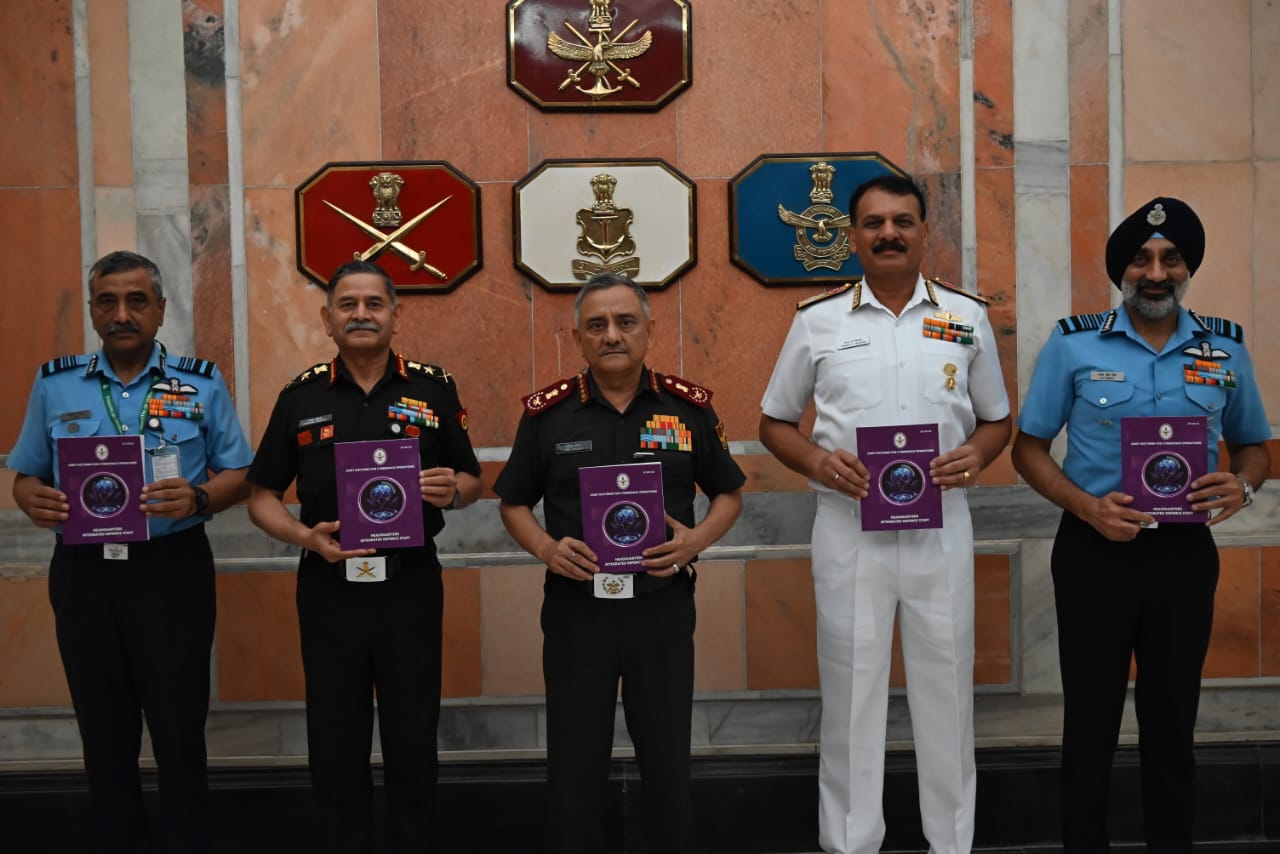
- 10 Aug 2025
In News:
Recently, the Chief of Defence Staff (CDS) General Anil Chauhan released thedeclassified versions of India’s Joint Doctrines for Cyberspace Operations and Amphibious Operations. This step reflects India’s effort to enhance jointness, interoperability, and transparency in military operations while strengthening preparedness for multi-domain warfare.
Cyberspace Operations Doctrine
What is Cyberspace?
- A global domain comprising information systems, communication networks, satellites, and data infrastructures.
- It is borderless, dual-use (civilian and military), and subject to rapidly evolving threats.
Components of Cyberspace Operations
- Defensive Cyber Operations – Protects national and military networks against malware, hacking, and data breaches.
- Offensive Cyber Operations – Targets adversary systems to disrupt communications, disable command networks, or damage infrastructure.
- Cyber Intelligence & Reconnaissance – Collects and analyses data to detect vulnerabilities and anticipate attacks.
- Cyber Support Operations – Provides digital tools and assistance to land, maritime, air, and space operations.
- Resilience & Recovery – Ensures continuity through backup systems, redundancies, and rapid restoration measures.
Operational Principles
- Threat-informed Planning – Based on real-time intelligence.
- Interoperability – Seamless coordination across the three Services and with civil agencies.
- Layered Defence – Multi-tiered cyber security protocols.
- Legal & Ethical Compliance – Operates within Indian law and global cyber norms.
- Real-time Response – Swift counteraction to minimise damage.
Significance:
- Shields critical infrastructure (power grids, defence networks, communication systems).
- Acts as a force multiplier, enhancing conventional operations.
- Prepares India for hybrid warfare, where cyber, land, sea, and air threats are interlinked.
Amphibious Operations Doctrine
What are Amphibious Operations?
- Coordinated actions by naval, air, and land forces launched from the sea to secure objectives onshore.
- Applications range from combat missions to humanitarian assistance and disaster relief (HADR).
Key Features
- Tri-service Integration – Combines maritime, aerial, and ground assets.
- Rapid Response – Enables swift deployment from sea to shore.
- Strategic Reach – Expands influence over island territories and littoral regions.
- Flexible Missions – Suitable for both warfare and non-war operations (e.g., disaster relief).
- Maritime–Land Linkage – Strengthens the sea–land operational continuum.
Significance:
- Enhances maritime superiority in the Indian Ocean Region.
- Secures India’s island territories, trade routes, and coastal areas.
- Strengthens India’s blue-water navy aspirations and capacity for overseas contingencies.
- Provides options for HADR missions, vital in the Indo-Pacific where natural disasters are frequent.
Strategic Importance of Doctrines
The release of these doctrines marks a major step in joint military planning and multi-domain operations. They:
- Promote synergy among the Army, Navy, and Air Force, reducing duplication of efforts.
- Build resilience against hybrid threats, including cyber-attacks and maritime conflicts.
- Signal India’s intent to safeguard its national security and global strategic interests.
- Provide policymakers and military planners with a common framework and lexicon.
Further, the CDS has initiated work on new doctrines covering Military Space Operations, Special Forces Operations, Airborne/Heliborne Operations, Integrated Logistics, and Multi-Domain Operations. These will ensure India remains prepared for the emerging spectrum of modern warfare.
Biochar in India
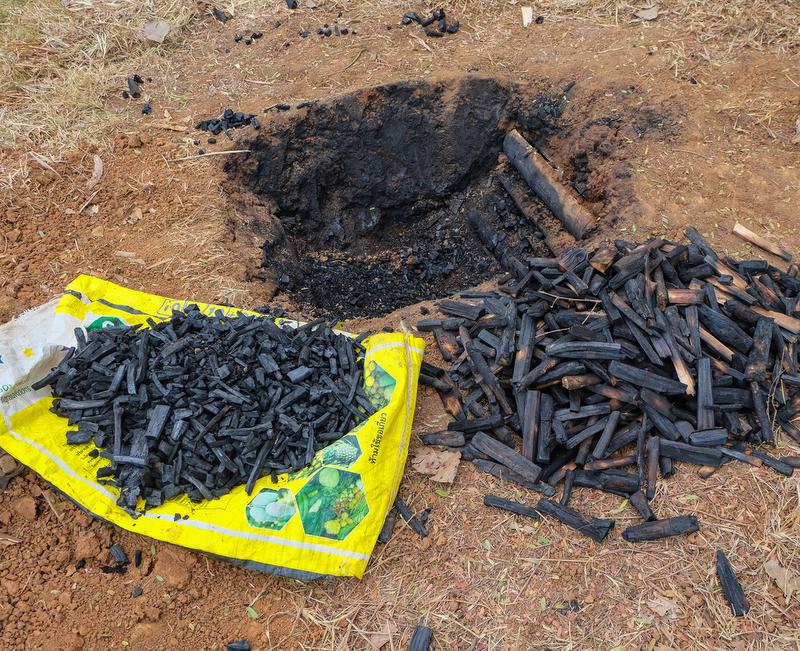
- 10 Aug 2025
In News:
India is set to launch its carbon credit trading market in 2026, with biochar emerging as a promising carbon dioxide removal (CDR) technology. Biochar is a carbon-rich, porous, and stable substance produced through pyrolysis (burning biomass without oxygen) ofagricultural residue and municipal solid waste. It offers multiple co-benefits spanning climate mitigation, agriculture, energy, construction, and wastewater treatment.
India’s Untapped Biochar Potential
- Resource base: India generates 600+ million tonnes of agricultural residue and 60+ million tonnes of municipal solid waste annually, much of which is burnt or dumped, causing air pollution and GHG emissions.
- Carbon removal: Converting 30–50% of surplus biomass can yield 15–26 million tonnes of biochar, sequestering ~0.1 gigatonne of CO?-eq annually.
- Byproducts:
- Syngas (20–30 MT): Can generate 8–13 TWh electricity, replacing 0.4–0.7 MT coal/year.
- Bio-oil (24–40 MT): Can offset 8% of diesel/kerosene demand, reducing >2% of India’s fossil-fuel-based emissions.
- Employment: Village-level pyrolysis units could create 5.2 lakh rural jobs, linking waste management with livelihoods.
Multi-Sectoral Applications
1.Agriculture and Soil Health
- Enhances soil organic carbon and fertility.
- Improves water retention, critical for semi-arid regions.
- Reduces fertilizer needs by 10–20% and increases crop yields by 10–25%.
- Cuts N?O emissions by 30–50% (273× more potent than CO?).
- Example: Andhra Pradesh’s Community Managed Natural Farming has piloted biochar to improve soil quality.
2. Energy and Fuel Substitution
- Syngas and bio-oil provide renewable energy for rural micro-grids and transport.
- Example: Maharashtra pilot projects use pyrolysis gas to replace diesel generators.
3. Construction Sector
- Adding 2–5% biochar to concrete:
- Increases mechanical strength and heat resistance (+20%).
- Sequesters ~115 kg CO? per cubic metre.
- Offers a green alternative to cement, key for India’s infrastructure push.
- Example: IIT-Madras research shows biochar-concrete mix lowers embodied carbon in buildings.
4. Wastewater Treatment
- 1 kg biochar can treat 200–500 litres of wastewater.
- With India producing 70 billion litres/day (72% untreated), biochar offers low-cost, decentralised treatment solutions for rural and urban areas.
Clouded Leopard
- 10 Aug 2025
In News:
A rare video recently shared by Indian Forest Service officer Susanta Nanda offered a rare glimpse into the secretive life of the clouded leopard (Neofelisnebulosa), showcasing a mother with her cubs in the rainforests of Northeast India. The sighting highlights the critical conservation importance of this elusive and endangered species.
About the Clouded Leopard
- Scientific name:Neofelisnebulosa (mainland Asia); Neofelisdiardi (Sunda clouded leopard, Sumatra & Borneo).
- Classification: Among the most ancient cat species; neither a true “great cat” nor a small cat — cannot roar or purr.
- Size: Medium-sized (60–110 cm long; 11–20 kg); lifespan ~13–17 years.
- Distinctive features:
- Named for large “cloud-like” coat patterns (ellipses with dark edges).
- Exceptionally long tail (often body-length) for balance.
- Long canine teeth, proportionally the same size as those of a tiger.
- Broad paws and short legs, making it an agile climber; one of the only cats that can climb down trees headfirst, hang upside down, and hunt arboreally.
- Behaviour: Solitary, shy, and nocturnal.
Distribution and Habitat
- Found across Nepal, Bangladesh, India, Indochina, Sumatra, Borneo, and southern China (historically also Taiwan).
- In India: Present in Sikkim, northern West Bengal, Meghalaya, Tripura, Mizoram, Manipur, Assam, Nagaland, and Arunachal Pradesh.
- Declared the State Animal of Meghalaya.
- Habitat preference: Lowland tropical rainforests, but also found in dry woodlands, secondary forests, high altitudes in the Himalayas, and even mangrove swamps (Borneo).
Conservation Status
- IUCN Red List:Vulnerable.
- Global wild population:fewer than 10,000 individuals.
- Threats:
- Habitat loss (deforestation, infrastructure expansion).
- Poachingfor pelts and body parts.
- Human-wildlife conflict.
Conservation Significance
- Rare sightings, such as the video from Northeast India, underscore the species’ ecological and cultural importance.
- Conservationists stress the need for:
- Habitat protection through transboundary wildlife corridors.
- Strengthening protected areas across Northeast India.
- Community participation to reduce conflict and safeguard prey base.
Great Barrier Reef
- 10 Aug 2025
In News:
The Great Barrier Reef (GBR), the world’s largest living structure and a UNESCO World Heritage Site (1981), has recorded its steepest decline in hard coral cover in nearly four decades, according to the Australian Institute of Marine Science (AIMS) 2025 survey. The reef, spread over 2,000 km along Australia’s northeast coast and covering ~350,000 sq. km, accounts for nearly 10% of global coral reef ecosystems and hosts extraordinary biodiversity, including 400 coral species, 1,500 fish species, 4,000 mollusk species, six of seven turtle species, dugongs, and numerous seabirds.
The 2024–25 Mass Bleaching Event
- The 2024 bleaching, the fifth since 2016, coincided with record ocean heat stress, cyclones, flooding, and crown-of-thorns starfish outbreaks.
- AIMS’ long-term monitoring across 124 reefs (Aug 2024–May 2025) revealed:
- 48% reefs showed a decline in coral cover,
- 42% reefs showed no change,
- Only 10% reefs recorded recovery.
- Some areas, especially in the northern GBR (around Lizard Island), lost over 70% of hard coral cover, the sharpest decline since monitoring began in 1986.
Regional Breakdown of Coral Loss (2024–25)
- Northern GBR: Coral cover dropped from 39.8% to 30% (–24.8%), driven by record heat stress, cyclones, and freshwater inundation.
- Central GBR: Cover fell by 13.9% to 28.6%, with Cairns sector reefs losing 6–60% due to Cyclone Jasper (2023) and flooding.
- Southern GBR: Sharpest relative loss, down from 38.9% to 26.9% (–30.6%), largely due to extreme heat stress in the Capricorn-Bunker sector, storm damage, and coral disease.
Drivers of Decline
- Climate change-induced heat stress – primary driver of bleaching.
- Cyclones & floods – physical damage and sedimentation.
- Crown-of-thorns starfish – venomous predators that feed on corals.
- Coral disease – post-bleaching infections weaken recovery.
Oscillating Ecosystem Under Stress
- Acropora corals, fast-growing and heat-resilient species that helped reef recovery (2017–24), were worst hit.
- Scientists warn of increasing volatility in coral cover, shifting between record highs and lows within short periods.
- Before the 1990s, mass bleaching was rare (first major event: 1998). Since 2020, GBR has faced bleaching in 2020, 2022, 2024, and 2025, with two consecutive years of mass bleaching for the second time in a decade.
Global Perspective
According to the US NOAA, between Jan 2023 and May 2025, 83.9% of global coral reef area experienced bleaching-level heat stress, with mass bleaching reported in at least 83 countries and territories.
Conservation & Outlook
The GBR, managed largely under the Great Barrier Reef Marine Park Authority, remains one of the most studied ecosystems. However, repeated bleaching events are leaving insufficient recovery time, pushing the ecosystem toward collapse. Scientists warn the window to save the GBR is rapidly closing without urgent global climate action.
Dark Eagle Hypersonic Missile

- 09 Aug 2025
In News:
The United States has achieved a major milestone by deploying its Long-Range Hypersonic Weapon (LRHW), known as Dark Eagle, to Australia’s Northern Territory during the Talisman Sabre 2025 multinational military exercise. This marks the system’s first-ever overseas deployment and represents a critical step in strengthening U.S. deterrence capabilities in the Indo-Pacific.
Features:
- Range & Speed: Approximately 2,700–2,776 km with a reported velocity of up to Mach 17.
- Design: A land-based, road-mobile system comprising four trailer-mounted launchers, each with two missile canisters.
- Warhead: Equipped with the Common Hypersonic Glide Body (C-HGB), an unpowered yet maneuverable glide vehicle capable of evading interception.
- Deployment Capability: Road-mobile, air-transportable (C-17), and integrated with the U.S. Army’s Integrated Air and Missile Defense Battle Command System (IBCS).
- Developers: Jointly developed by Lockheed Martin and Northrop Grumman, with collaboration from the U.S. Navy on the glide body and boosters.
- Mission Role: Designed to penetrate anti-access/area-denial (A2/AD) networks, suppress enemy defenses, and engage time-sensitive, high-value targets.
Exercise Talisman Sabre
For the first time, India participated in the 11th edition of Exercise Talisman Sabre 2025, a large-scale Australia-led multinational military exercise. This reflects India’s growing role in the Indo-Pacific security architecture and deepening defense cooperation with like-minded partners.
- Launch & Evolution: Initiated in 2005 as a bilateral drill between Australia and the United States, it has expanded into a premier multinational warfighting exercise.
- Scale: The 2025 edition is the largest-ever, involving over 35,000 personnel from 19 nations including Australia, U.S., India, Japan, France, U.K., and others.
- Geographical Spread: Conducted across Queensland, Northern Territory, Western Australia, New South Wales, and Christmas Island, with a first-ever extension to Papua New Guinea, underscoring wider regional engagement.
- Objective:
- To uphold a free, open, and inclusive Indo-Pacific.
- Enhance military readiness, interoperability, and joint operational capabilities.
- Reinforce regional security cooperation among allies and partners.
- Activities: Includes live-fire drills, amphibious landings, ground maneuvers, air combat, maritime operations, and force preparation exercises, testing joint warfighting capabilities.
Key India-Australia Military Exercises
- AUSINDEX – Naval exercise.
- Pitch Black – Multinational air exercise.
- AustraHind – Bilateral military exercise.
Key India-U.S. Military Exercises
- YudhAbhyas – Joint military training.
- Vajra Prahar – Special Forces exercise.
- Cope India – Air combat exercise.
- Tiger Triumph – Tri-services amphibious exercise.
France’s Largest Wildfire in Decades
- 09 Aug 2025
In News:
Recently, southern France witnessed its worst wildfire since 1949, scorching nearly 16,000 hectares (39,500+ acres) of forests and villages—an area 1.5 times the size of Paris. Though the blaze has now been contained, firefighters remain deployed to prevent flare-ups and secure the affected zone.
Causes and Challenges
- Climatic Drivers: Officials and France’s Environment Minister attributed the fire’s intensity to climate change, prolonged drought, strong winds, and extremely dry vegetation.
- Geographic Factors: Proximity to the Pyrenees mountains and the Mediterranean coast made the terrain vulnerable to rapid fire spread. Loss of traditional vineyards and land-use changes further accelerated the blaze.
- Future Risks: France’s weather office has warned of fresh heatwaves, increasing wildfire vulnerability across southern Europe.
Geographic Overview of France
- Location: Northern & Eastern Hemispheres; bordered by Belgium, Luxembourg, Germany, Switzerland, Italy, Spain, Andorra.
- Water Bodies: Bounded by the Bay of Biscay (west), English Channel (northwest), and Mediterranean Sea (south).
- Major Rivers:Loire (into Atlantic), Seine (into English Channel).
- Mountain Ranges:Alps, Jura, and Pyrenees (natural border with Spain).
- Resources: Coal, iron ore, bauxite, zinc, uranium, potash, gypsum, etc.
- Overseas Regions: Guadeloupe, French Guiana, Réunion, Martinique, Mayotte.
- Capital: Paris.
Notary Portal

- 09 Aug 2025
In News:
The Government of India has launched the Notary Portal, a dedicated digital platform designed to modernize services under the Notaries Act, 1952 and the Notaries Rules, 1956. The initiative, led by the Ministry of Law and Justice, aims to create a faceless, paperless, transparent, and efficient system for notarial services.
Key Features
- Online Interface: Connects notaries appointed by the Central Government with the Ministry for seamless service delivery.
- Services Offered:
- Submission of applications for appointment as notaries.
- Verification of eligibility for appointment.
- Issuance of digitally signed Certificates of Practice.
- Renewal of certificates, change of practice area, and submission of annual returns.
- Current Status: Modules for verification of documents, eligibility checks, and issuance of digitally signed certificates are operational.
Significance
- Enhances transparency and efficiency in legal certification processes.
- Reduces paperwork, delays, and physical interface, thereby minimizing scope for corruption.
- Aligns with the government’s broader agenda of Digital India and modernization of legal services.
SheLeadsProgramme
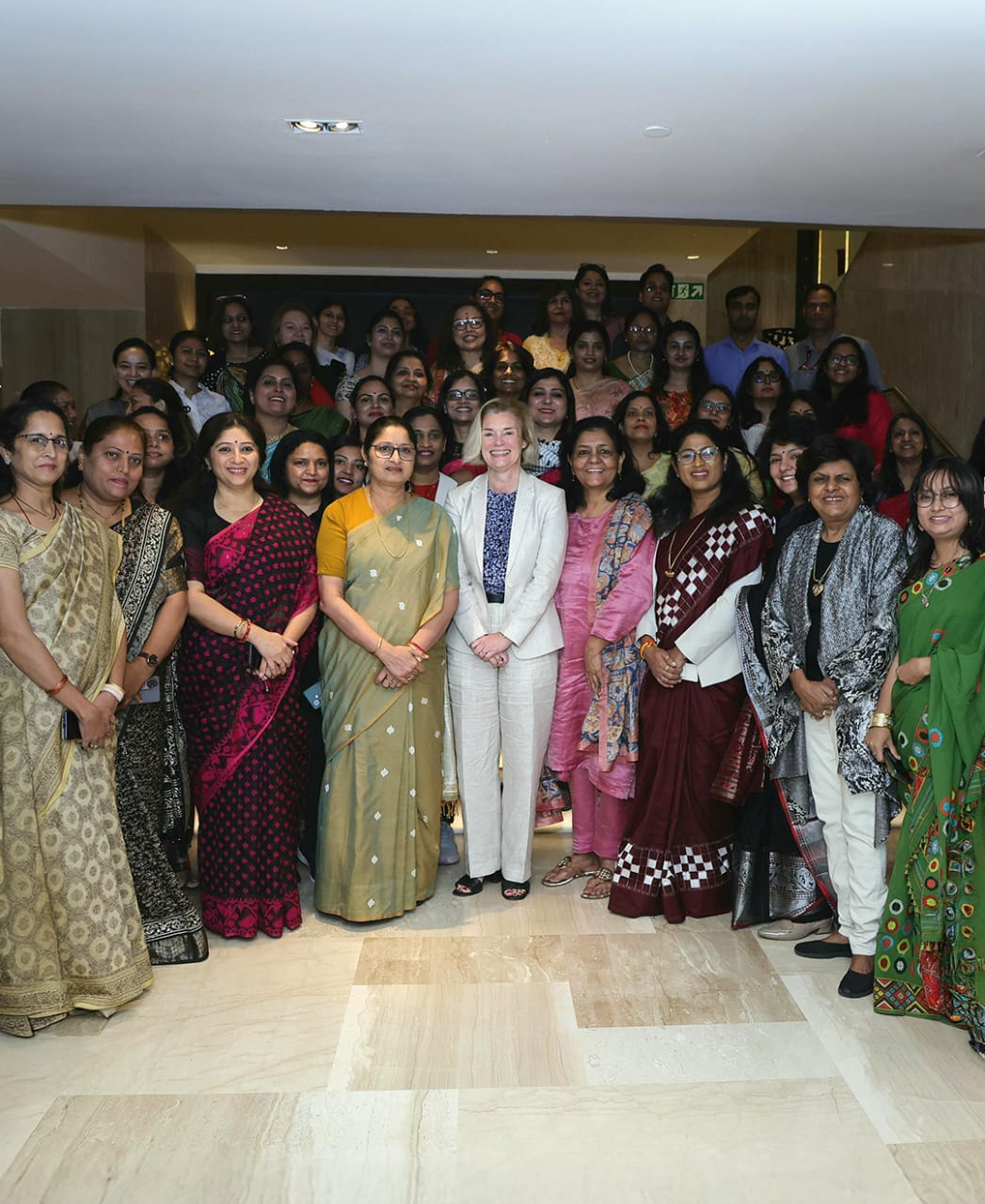
- 09 Aug 2025
In News:
The Union Minister for Women and Child Development, inaugurated the second edition of UN Women’s flagship capacity-building programme — SheLeads II: Workshop for Women Leaders in New Delhi (August 2025). The initiative seeks to strengthen women’s political leadership, a crucial step towards women-led development and the vision of a Viksit Bharat.
Key Highlights:
- The workshop comes in the backdrop of the Women’s Reservation Act, 2023, mandating 33% reservation for women in the Lok Sabha and State Legislative Assemblies.
- Despite this landmark reform, only 14% of seats in the 18th Lok Sabha are currently occupied by women, highlighting the urgent need for leadership training and political empowerment.
About SheLeadsProgramme
- Flagship Initiative: Launched by the UN Women India Country Office.
- Aim: Advance gender equality in public and political leadership, equipping women with skills, confidence, and networks to contest elections and participate effectively in governance.
- Scope: Supports women leaders in shaping policies, governance structures, and electoral narratives that reflect the aspirations of all citizens.
- Participation: In 2025, over 260 applications from 22 states were received; 36 participants were selected for the two-day workshop.
- Engagement: Interactive sessions with MPs, policy experts, and media strategists on electoral campaigning, governance, narrative building, and media engagement.
About UN Women
- Established in 2010 by the UN General Assembly, consolidating resources and mandates under one entity.
- Mandate:
- Support intergovernmental bodies (e.g., Commission on the Status of Women) in framing global standards.
- Assist member states in implementing gender equality commitments through technical and financial support.
- Partner with civil society to advance women’s rights and empowerment.
Strategic Interventions for Green Hydrogen Transition (SIGHT) Scheme

- 09 Aug 2025
In News:
India has achieved a milestone in its clean energy transition with the discovery of a record-low price of ?55.75/kg (USD 641/MT) for Green Ammonia in the first-ever auction conducted by the Solar Energy Corporation of India (SECI) under the Strategic Interventions for Green Hydrogen Transition (SIGHT) Scheme, a core component of the National Green Hydrogen Mission (NGHM).
About the SIGHT Scheme
- Nature: Flagship financial mechanism under NGHM.
- Nodal Ministries: Ministry of New & Renewable Energy (MNRE) and Ministry of Petroleum & Natural Gas (MoPNG).
- Objective:
- Scale up green hydrogen and its derivatives (like green ammonia).
- Make them cost-competitive with fossil-based alternatives.
- Create domestic demand across fertilizer, refining, and shipping sectors.
- Financial Outlay: ?17,490 crore (till 2029–30) out of the total NGHM budget of ?19,744 crore.
- Implementation Modes:
- Mode 1: Incentives to lowest incentive seekers.
- Mode 2A: Aggregated demand for Green Ammonia (fixed incentive).
- Mode 2B: Aggregated demand for Green Hydrogen (fixed incentive).
- Incentive Structure (Mode 2B): ?50/kg (Year 1), ?40/kg (Year 2), ?30/kg (Year 3).
- Monitoring: A joint MNRE–MoPNG committee ensures compliance with notified green hydrogen standards.
First Green Ammonia Auction (Mode-2A)
- Winning Bid: ?55.75/kg (down from ?100.28/kg discovered in H2Global auction 2024).
- Quantity: 75,000 MTPA out of a total tendered 7.24 lakh MTPA.
- Offtaker:Paradeep Phosphates Ltd., Odisha.
- Contract: Fixed 10-year supply, ensuring price stability and supply chain reliability.
- Global Comparison: Price is slightly higher than grey ammonia (USD 515/MT, March 2025) but provides strong economic incentives for clean transition.
Ectopic Pregnancy
- 08 Aug 2025
In News:
A recent rare case from Bulandshahr, Uttar Pradesh, reported a fetus developing in the liver—a condition termed intrahepatic ectopic pregnancy. This has drawn attention to ectopic pregnancies, a critical medical concern.
What is an Ectopic Pregnancy?
- An ectopic pregnancy occurs when a fertilised egg implants outside the uterus, instead of the uterine lining.
- The fallopian tube is the most common site (called tubal pregnancy).
- Other possible sites include the ovary, abdominal cavity, cervix, or, in extremely rare cases, the liver.
Causes
- Blockage or abnormal movement of the fertilised egg.
- Inflammation or scarring of fallopian tubes.
- Damage from prior surgeries or pelvic infections.
- Congenital irregularities in the structure of the fallopian tubes.
Symptoms
- Early pregnancy-like signs: missed periods, nausea, breast tenderness.
- Progressive symptoms:
- Vaginal bleeding
- Abdominal or pelvic pain
- Back pain, shoulder pain, dizziness
- Low blood pressure in severe cases.
Risks & Complications
- If untreated, ectopic pregnancy can cause rupture of the fallopian tube, leading to life-threatening internal bleeding.
- It is a medical emergency and a significant cause of maternal morbidity and mortality.
Treatment
- Methotrexate (a drug that stops cell growth and dissolves existing cells) may be used in some cases.
- Surgical intervention is required in cases of rupture or internal bleeding.
World Air Transport Statistics (WATS) 2024
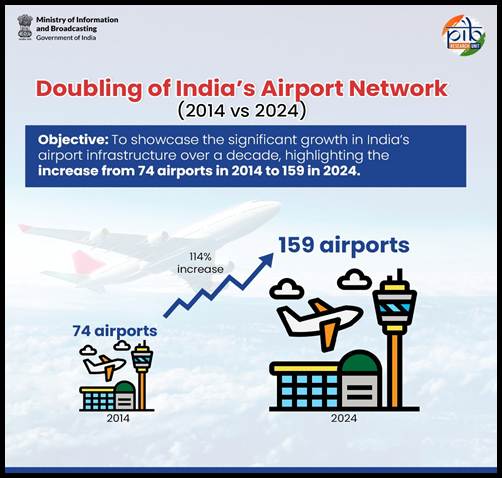
- 08 Aug 2025
In News:
According to the World Air Transport Statistics (WATS) 2024, released by the International Air Transport Association (IATA), India has emerged as the world’s 5th-largest aviation market, handling 211 million passengers in 2024.
Key Findings of WATS 2024
- India: 211 million passengers in 2024, growing 11.1% over 2023.
- Ahead of: Japan (205 million, 18.6% growth).
- Global Rankings:
- United States – 876 million passengers (+5.2%).
- China – 741 million passengers (+18.7%).
- United Kingdom – 261 million passengers.
- Spain – 241 million passengers.
- India – 211 million passengers.
- Busiest Routes (Airport Pairs):
- Global:Jeju–Seoul (South Korea) – 13.2 million passengers.
- India: Mumbai–Delhi – 5.9 million passengers, ranked 7th globally.
- Trend: Asia-Pacific dominated busiest airport-pair rankings.
India’s Aviation Transformation
1. Legislative Reforms
- Protection of Interests in Aircraft Objects Bill, 2025: Aligns leasing system with the Cape Town Convention, lowering leasing costs and boosting investor confidence.
- BharatiyaVayuyanAdhiniyam, 2024: Replaces colonial-era Aircraft Act, 1934; promotes Make in India, simplifies licensing, and aligns with ICAO norms.
2. Infrastructure Expansion
- New Terminals: Foundation laid at Varanasi, Agra, Darbhanga, Bagdogra.
- Greenfield Airports: 12 operationalised since 2014 (e.g., Shirdi, Mopa, Shivamogga); Navi Mumbai and Noida (Jewar) to be operational by 2025–26.
- Investment: ?91,000 crore allocated under National Infrastructure Pipeline (NIP); ?82,600 crore already spent by Nov 2024.
3. Government Initiatives
- UDAN Scheme: Expands regional air connectivity, affordable travel.
- National Civil Aviation Policy (NCAP): Boosts MRO (Maintenance, Repair, Overhaul), airport development, and leasing ecosystem.
- Green Airports Policy: Promotes renewable energy, waste reduction, and carbon neutrality.
- Aircraft Leasing Hub:GIFT City being developed as a global hub for aircraft leasing and financing.
Significance
- India consolidates its position as a major aviation hub, driven by rising passenger traffic, policy reforms, and infrastructure expansion.
- Reflects growing regional connectivity under UDAN and global competitiveness with regulatory modernisation.
- Places India in the top five global aviation markets for the first time.
Asian Giant Tortoise
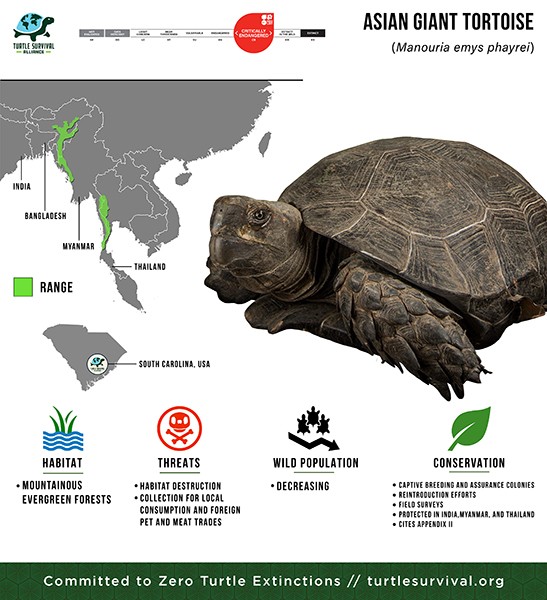
- 08 Aug 2025
In News:
The Asian Giant Tortoise, the largest tortoise in mainland Asia, has been reintroduced into the Zeliang Community Reserve in Peren district, Nagaland. Local youth groups have been engaged as “tortoise guardians” to ensure protection.
About Asian Giant Tortoise
- Scientific name:Manouriaemysphayrei
- Common name: Asian Giant Tortoise / “Small elephants of the forests” (due to their role in forest ecology).
- Lineage: Among the oldest tortoise lineages in the world; display unique nesting behaviour similar to crocodilians, where they protect eggs and regulate incubation temperatures.
- Appearance: Hatchlings are greyish-brown, becoming charcoal-colored in adulthood.
- Diet: Bamboo shoots, tubers, soft vegetation, some invertebrates, and frogs.
Habitat & Distribution
- Habitat: Tropical and subtropical evergreen hill forests.
- Range in India: Northeastern states – Arunachal Pradesh, Nagaland, Assam.
- Global distribution: Bangladesh, Myanmar, Thailand, Malaysia, Indonesia.
Ecological Role
- Seed Dispersal: Helps regenerate forests by dispersing seeds.
- Scavenging: Cleans forest floor by feeding on decomposed organic matter.
Threats
- Hunting and collection for consumption.
- Illegal trade (pets and exotic meat).
- Habitat destruction due to shifting cultivation, deforestation, and infrastructure projects.
Conservation Status
- IUCN Red List: Critically Endangered
- CITES: Appendix II
Conservation Efforts
- Captive Breeding & Assurance Colonies for population recovery.
- Reintroduction Programmes like the recent one in Nagaland.
- Community-based conservation with active participation of locals as guardians.
- Field Surveys to monitor population health and habitat conditions.
Global Artificial Intelligence (AI) City Index 2025

- 08 Aug 2025
In News:
Bengaluru ranks 26thin Global AI City Index, Singapore secures top spot.
About the Index
- Published by: Market research firm Counterpoint Research.
- Objective: Benchmarks global cities on their AI capacity, investment, and innovation.
- Evaluation Criteria:
- AI R&D ecosystem and startup strength
- Investment inflows & public–private partnerships
- AI applications in transport, healthcare, and education
- Data centre growth & digital infrastructure readiness
- Governance and regulatory frameworks
Global Rankings (2025)
- Top 5 Cities: Singapore (1st), Seoul (2nd), Beijing (3rd), Dubai (4th), San Francisco (5th).
- Key Trends:
- Singapore’s success driven by strong startup ecosystem and public–private collaboration in healthcare, telecom, and transport.
- Seoul excels in AI healthcare and education applications.
- Beijing introduced formal AI education for all primary & secondary school students (2025).
- Investments in supercomputing expected to reduce gap between North America and China.
- Tech industry leaders: Microsoft (most active vendor with AI data centres, training, innovation hubs), followed by Google and Amazon expanding their global AI footprint.
India’s Performance
- Bengaluru: Ranked 26th globally – India’s top AI R&D and data centre hub with a vibrant startup ecosystem attracting foreign investment.
- Other Indian Cities:
- Mumbai & Delhi – Leveraging AI for traffic management and public security.
- Chennai & Kolkata – Emerging AI hubs.
- India’s Challenge: Report highlights need for a comprehensive AI roadmap and robust regulatory framework to maximize growth potential.
Significance
- Establishes Bengaluru as India’s AI capital, strengthening its role in digital infrastructure and innovation.
- Reflects India’s growing presence in the global AI landscape while underlining policy gaps.
- Offers lessons from global leaders like Singapore and Seoul on AI integration in governance, education, and healthcare.
India Electric Mobility Index (IEMI)

- 08 Aug 2025
In News:
NITI Aayog launched the India Electric Mobility Index (IEMI), a first-of-its-kind tool developed to comprehensively track and benchmark the progress of States and Union Territories (UTs) in achieving their Electric Mobility goals.
Key Highlights:
- Objective: The IEMIis a first-of-its-kind national tool designed to comprehensively track, evaluate, and benchmark the performance of States and Union Territories (UTs) in their electric mobility transition. It aims to guide sub-national policies, strengthen EV adoption, and align efforts with India’s net-zero by 2070 target.
Core Features of IEMI
- Benchmarking Framework: Scores States/UTs on a 0–100 scale.
- Indicators: Covers 16 indicators under three core themes:
- Transport Electrification Progress – Demand-side adoption in passenger, freight, and public transport.
- Charging Infrastructure Readiness – Deployment of public/private charging stations and supportive policies.
- EV Research & Innovation Ecosystem – R&D, manufacturing capacity, and technological advancements.
- Dashboard Access: Interactive tool for real-time comparison, rankings, and insights.
- Policy Guidance Tool: Identifies gaps, best practices, and investment priorities.
- Cross-Sectoral Utility: Supports inter-ministerial coordination, capacity building, and infrastructure planning.
Trends & Rankings in IEMI 2024
- Top Performers:Delhi, Maharashtra, and Chandigarh led in EV readiness and innovation.
- EV Share in Sales: Grew from 5% (2018) to 7.7% (2024).
- Total EVs on Road: Surpassed 5 million by June 2025, with 12 lakh EVs registered in 2024 alone.
- Charging Infrastructure: Over 25,000 public charging stations installed by October 2024; Karnataka leads in installations.
- Policy Coverage:29 States/UTs have notified EV policies; 4 more are in draft stage.
Significance of IEMI
- Promotes Green Mobility: Aligns state actions with India’s decarbonisation roadmap.
- Encourages Healthy Competition: Enables peer learning and best practice sharing among states.
- Supports Make in India: Strengthens domestic EV manufacturing and innovation clusters.
- Guides Infrastructure Planning: Highlights charging network gaps for targeted rollouts.
- Informs Policy: Helps States/UTs design tailored strategies for equitable e-mobility adoption.
Mount LewotobiLakiLaki
- 07 Aug 2025
In News:
Mount LewotobiLakiLaki, one of Indonesia’s most active volcanoes, erupted in August 2025, spewing volcanic ash up to 18 km into the atmosphere and blanketing nearby villages on the island of Flores. The eruption followed another event just hours earlier, which sent ash plumes 10 km high, accompanied by glowing lava and volcanic lightning.
Key Features of the Eruption
- Scale: Among Indonesia’s largest volcanic events since the 2010 Mount Merapi eruption, which killed over 350 people and displaced hundreds of thousands.
- Hazards Observed:
- Pyroclastic flows of gas, rocks, and lava up to 5 km down the slopes.
- Volcanic debris, including hot gravel, scattered as far as 8 km from the crater.
- Risk of lahars (volcanic mudflows) triggered by heavy rainfall.
- Alert Status: Indonesia’s Geology Agency placed the volcano on the highest alert level since June 18, 2025. The exclusion zone was extended to 7 km radius. Thousands of residents have been permanently relocated due to repeated eruptions, including a deadly series in November 2024 that killed nine and destroyed homes.
Geological Context
- Volcano Type: Part of the Lewotobi twin stratovolcano system (“husband and wife”), comprising:
- LewotobiLakiLaki (male)
- Lewotobi Perempuan(female)
- Location: Island of Flores, Indonesia.
- Height: 1,584 metres (5,197 feet).
- Ring of Fire Connection:
- Situated along the Pacific Ring of Fire (Circum-Pacific Belt), a 40,000 km horseshoe-shaped zone around the Pacific Ocean.
- Hosts 75% of Earth’s volcanoes (over 450) and accounts for 90% of global earthquakes.
India–Nepal Mutual Legal Assistance Pact and Extradition Treaty
- 07 Aug 2025
In News:
India and Nepal have recently finalised a Mutual Legal Assistance (MLA) Agreement in Criminal Matters, marking a significant step in strengthening bilateral security cooperation. The pact is designed to enhance cross-border collaboration in criminal investigations, evidence sharing, and law enforcement.
Mutual Legal Assistance (MLA) in Criminal Matters
- Definition: A bilateral or multilateral treaty that provides a structured framework for cooperation between countries to combat transnational crimes such as terrorism, human trafficking, smuggling, cybercrime, and financial fraud.
- Legal Nature:
- MLAT countries: Legally binding and based on reciprocity.
- Non-MLAT countries: Cooperation remains discretionary.
- India’s Practice:
- Central Authority: Ministry of Home Affairs (MHA), assisted by the Ministry of External Affairs (MEA) when routed through diplomatic channels.
- Existing Network: India has signed MLA treaties with 42 countries (as of November 2019), including the USA (2005), UK (1995), and France (2005).
- Significance for Nepal: Until now, Nepal (along with Bhutan) was the only neighbouring country without such a pact with India, which inadvertently made it a safe haven for criminals.
Extradition Treaty with Nepal
- Current Treaty: India and Nepal are working to revise their outdated 1953 Extradition Treaty.
- Objective of Revision: To overcome legal and administrative hurdles that delay or prevent the extradition of fugitives involved in organised crime and terrorism.
Strategic Importance
- Enhances border management and security cooperation between the two countries.
- Prevents misuse of the open India–Nepal border by criminals and extremists.
- Strengthens India’s regional security framework and supports its fight against transnational crime.
Framework Agreement
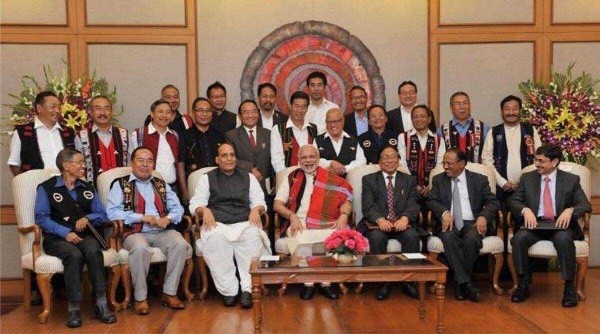
- 07 Aug 2025
In News:
The Framework Agreement (FA), signed on 3rd August 2015 between the Government of India and the National Socialist Council of Nagalim–Isak-Muivah (NSCN-IM), remains a central element in the ongoing Naga peace process. Its 10th anniversary (2025) witnessed renewed debates over its sanctity and future.
Background
- The Indo-Naga conflict has persisted for over six decades, rooted in demands for sovereignty and recognition of the Nagas’ unique identity.
- The Government of India first acknowledged the “unique history of the Nagas” in 2002 (Amsterdam talks), paving the way for structured peace negotiations.
The Framework Agreement: Key Provisions
- Recognition of Political Identity: India recognized the Nagas’ distinct historical and cultural identity.
- Shared Sovereignty: Proposed a cooperative model of governance, dividing powers between India and Nagalim while ensuring coexistence.
- Political Equality: Both India’s and Nagalim’s political systems to be respected, avoiding a hierarchical relationship.
- People-Centric Governance: Emphasizes sovereignty residing with the people, aiming for inclusive, democratic self-rule.
- Commitment to Peace: Seeks to end armed struggle and establish a roadmap for lasting peace and autonomy.
Political Significance
- The accord symbolically acknowledges the existence of the “Naga nation.”
- It shifted the discourse from an administrative problem to a political conflict requiring negotiated settlement.
- It was signed in New Delhi in the presence of Prime Minister Narendra Modi and interlocutor RN Ravi.
Current Developments
- On the 10th anniversary (2025), NSCN-IM chairman Q Tuccu reaffirmed commitment to the FA, calling it the “torchbearer of Naga sovereignty”.
- He criticized the Naga National Political Groups (NNPGs)—a coalition of other Naga factions—accusing them of aligning too closely with New Delhi by accepting a settlement under the Indian Constitution (“Agreed Position”).
- Tuccu argued that the NNPGs’ stance compromises the Nagas’ historical and political identity, unlike the FA which ensures recognition of sovereign rights.
- NSCN-IM maintains that the Government of India is slow in implementing the FA, but it remains committed despite challenges.
Operation Akhal
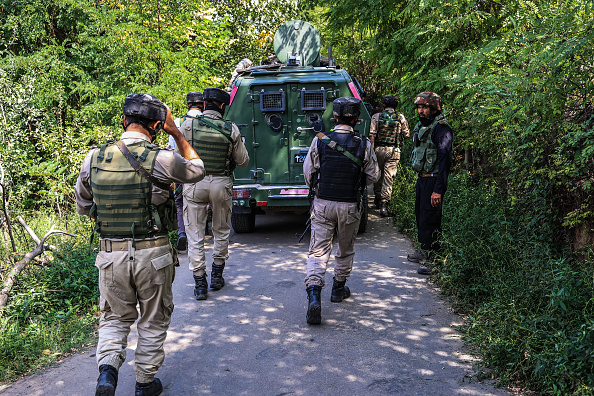
- 07 Aug 2025
In News:
Operation Akhal is a high-intensity counter-terrorism operation being conducted in the AkhalKhulsan forest area of Kulgam district, Jammu & Kashmir. Launched jointly by the Indian Army’s Chinar Corps, the J&K Police, and the Special Operations Group (SOG), the operation reflects India’s continued strategy to dismantle terror networks in the Union Territory.
Objectives
- Neutralize 3–5 terrorists based on intelligence inputs.
- Curb the activities of local terror modules.
- Strengthen internal security in South Kashmir.
- Disrupt associated networks of hawala funding, drug smuggling, and Overground Workers (OGWs).
Key Features
- Nature of Operation: Involves intermittent but calibrated firefights in dense forest terrain, supported by drone surveillance and reinforcements.
- Extended Duration: The operation has continued for several days, indicating the presence of multiple terrorists offering strong resistance.
- Casualties:
- At least three unidentified terrorists have been neutralized.
- Two soldiers — Lance Naik Pritpal Singh and Sepoy Harminder Singh — succumbed to injuries sustained in the encounter, highlighting the intensity of the conflict.
- Security Measures: Strict cordon around suspected hideouts, enhanced surveillance, and troop deployment to block escape routes.
Broader Context
- Operation Akhal is part of a post-Pahalgam crackdown on terror groups and their ecosystem in South Kashmir.
- Reflects India’s evolving counter-terror strategy combining ground operations, intelligence-based targeting, and crackdown on financial/logistical support systems.
Right to Repair and Repairability Index in India
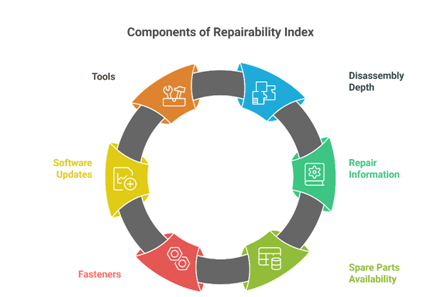
- 07 Aug 2025
In News:
India has accepted the proposal to introduce a Repairability Index for electronics, aligning with the global movement to strengthen the Right to Repair. This is seen as a step towards sustainable consumption and consumer empowerment, but concerns remain about the neglect of India’s vibrant informal repair economy, which is rich in tacit and generational knowledge.
Understanding Right to Repair
- Definition: The Right to Repair ensures that consumers can repair, modify, or access affordable third-party repair services for their products.
- Global Trends:
- The European Union mandates access to spare parts and repair manuals.
- Several U.S. states have legislated consumer rights for repair.
- The principle supports UN SDG-12 (Responsible Consumption and Production).
- India’s Framework:In 2023, the Department of Consumer Affairs launched a Right to Repair portal, covering electronics, automobiles, and farm equipment.
Significance Beyond Consumer Rights
- Tacit Knowledge Systems: Informal repairers acquire skills through observation and mentorship, not formal certifications. Repair hubs like Karol Bagh (Delhi) and Ritchie Street (Chennai) embody this tradition.
- Cultural Identity: Repair is not just technical work but part of India’s jugaad culture, reflecting frugality, resource reuse, and indigenous innovation.
- Sustainability: Repair extends product life, prevents premature disposal, and reduces e-waste burden.
- Unrecognized Workforce: Informal repairers, despite their contribution to the circular economy, remain excluded from labour laws and digital policy frameworks.
Policy and Digital Gaps
- E-Waste Rules, 2022: Focus primarily on recycling while overlooking repair as the first line of defence.
- Skill India (PMKVY): Training modules remain rigid and unsuitable for improvisational, diagnostic repair work.
- AI and Digital Public Infrastructure (DPI) Policies: Emphasize structured data but ignore human-led, tacit repair knowledge.
- Education (NEP 2020): While advocating experiential learning, it fails to recognize repair work as skill education.
- Legal Support: Informal repairers lack certification pathways, formal rights, or recognition within the digital economy roadmap.
Towards an Inclusive Repair Ecosystem
- Repairability Standards: Embed repair norms in AI systems, public procurement, and hardware design.
- Expanded Right to Repair:
- Introduce product classifications by repairability.
- Ensure access to manuals and spare parts.
- Promote community repair hubs.
- Skill Recognition: Integrate informal repairers into e-Shram, and design flexible reskilling modules.
- Knowledge Preservation: Use AI tools (LLMs, decision trees) to digitize tacit repair knowledge and make it shareable.
- Policy Convergence: Collaborate across ministries — Labour (MoLE), Electronics & IT (MeitY), Rural Development (MoRD) — for a unified repair ecosystem.
Single Window System for Appointment of State DGPs
- 06 Aug 2025
In News:
The Union Government has notified a Single Window System (SWS) to streamline the appointment of State Directors General of Police (DGPs)/Heads of Police Force (HoPFs). This move seeks to ensure transparency, uniformity, and compliance with Supreme Court directives inPrakash Singh vs Union of India (2006) and the Ministry of Home Affairs (MHA) guidelines.
Key Features of the SWS
- Standardization: Provides a checklist and uniform formats for States to submit proposals.
- Eligibility Certification: A Secretary-rank officer must certify that officers proposed for empanelment fulfill criteria, including a minimum of 6 months residual service.
- Timely Submission: States are mandated to send proposals at least 3 months before the anticipated vacancy of the DGP/HoPF.
Constitutional and Legal Framework
- State Subject: Police is a State subject under the 7th Schedule of the Constitution.
- Superintendence: As per Section 3 of the Police Act, 1861, the superintendence of police lies with the State Government.
- District Level: A dual control system exists—authority is shared between the District Magistrate (executive) and the Superintendent of Police (police administration).
- State Police Leadership: State police forces are generally headed by officers of the DGP rank.
India–EFTA Trade and Economic Partnership Agreement (TEPA)
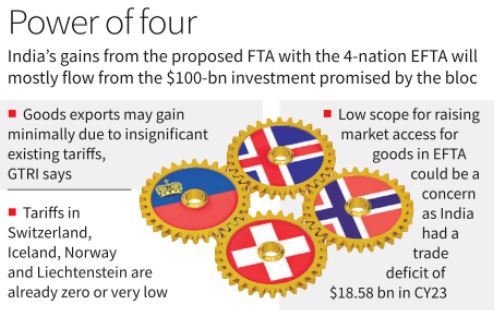
- 06 Aug 2025
In News:
The Trade and Economic Partnership Agreement (TEPA) between India and the European Free Trade Association (EFTA) — comprising Iceland, Liechtenstein, Norway, and Switzerland — will come into force on 1 October 2025.
Key Features of TEPA
- Strategic Investment Commitment
- Legally binding commitment of USD 100 billion FDI in India over 15 years (USD 50 billion in first 10 years + USD 50 billion in next 5 years).
- Expected to generate 1 million jobs.
- Excludes foreign portfolio investment (FPI); sovereign wealth funds exempted.
- India can withdraw tariff concessions if commitments are not met.
- Market Access & Tariff Concessions
- EFTA: 92.2% tariff lines offered, covering 99.6% of India’s exports (100% non-agri products + concessions on processed agri products).
- India: 82.7% tariff lines offered, covering 95.3% of EFTA exports (including gold, which retains existing duty).
- Duty-free access: Indian basmati and non-basmati rice exports, without reciprocity.
- Exclusions: Dairy, soya, coal, and sensitive agri products; protection given to sectors linked with PLI schemes (e.g., pharma, medical devices, processed food).
- Concessions: Cheaper Swiss chocolates, wines, luxury watches (though wines < USD 5 excluded to protect Indian wineries).
- Services & Professional Mobility
- Boosts Indian services exports: IT, business, cultural, sporting, educational, and audiovisual services.
- Mutual Recognition Agreements (MRAs): Nursing, accountancy, and architecture professionals to gain work access in EFTA countries.
- Legal & Institutional Framework
- Covers 14 chapters: market access, trade facilitation, investment promotion, IPR, sustainable development.
- Protects India’s generic medicines; prevents evergreening of patents.
- Promotes technology collaboration but not compulsory technology transfer.
About the European Free Trade Association (EFTA)
- Established: 1960 (Stockholm Convention).
- Members: Iceland, Liechtenstein, Norway, Switzerland (not part of the EU).
- Aim: Promote free trade and economic integration among members and global partners.
India–EFTA Trade Relations
- India is EFTA’s 5th largest trading partner (after EU, US, UK, China).
- Trade Volume (2024–25): USD 24.4 billion.
- India’s exports: USD 1.96 billion (chemicals, iron & steel, precious stones, sports goods, bulk drugs).
- Imports from EFTA: USD 22.45 billion (mainly gold, silver, coal, pharma, vegetable oil, medical equipment, dairy machinery).
- Deficit: Large trade deficit, primarily due to gold imports from Switzerland (USD 20.7 billion in 2021–22).
- India–EFTA Desk: Set up by Invest India as a single-window platform to facilitate investments under TEPA.
Krasheninnikov Volcano
- 06 Aug 2025
In News:
The Krasheninnikov volcano, located in Russia’s Kamchatka Peninsula, recently erupted for the first time in recorded history. The eruption followed a nearby magnitude 8.8 earthquake and released ash plumes reaching 20,000 ft (≈6,000 m) into the atmosphere. Authorities issued an “orange” aviation hazard code due to potential risks to air traffic.
About Krasheninnikov Volcano
- Type: Active stratovolcano (composite volcano).
- Height: ~1,856–1,886 m.
- Structure: Formed within a 9 km wide collapsed caldera created by a massive eruption ~39,600 years ago that expelled 50 cubic km of dacitic pumice.
- Cones: Contains two eruptive cones; the southern cone has an 800 m wide, 140 m deep crater.
- Past Activity: Last known eruption occurred ~400–600 years ago.
Kamchatka Peninsula – Volcanic Hotspot
- Lies along the Pacific “Ring of Fire”, one of the world’s most seismically active zones.
- Home to 114 Holocene volcanoes (eruptions recorded in the last ~12,000 years).
- Known for frequent explosive eruptions due to subduction of the Pacific Plate beneath the Eurasian Plate.
Stratovolcano – Key Features
- Steep, conical structure with alternating layers of lava and pyroclastic deposits.
- Typically found above subduction zones (e.g., Pacific Ring of Fire).
- Characterized by explosive eruptions due to viscous andesite/dacite lavas that trap gases.
- Account for about 60% of Earth’s volcanoes.
- Example: Mount Fuji (Japan), Mount Vesuvius (Italy), Mount St. Helens (USA).
Significance of 2025 Eruption
- First recorded activity of Krasheninnikov highlights the unpredictability of dormant volcanoes.
- Demonstrates the link between major seismic events and volcanic eruptions in tectonically active zones.
- Raises concerns for aviation safety, regional ecology, and monitoring of Ring of Fire volcanism.
Slovenia
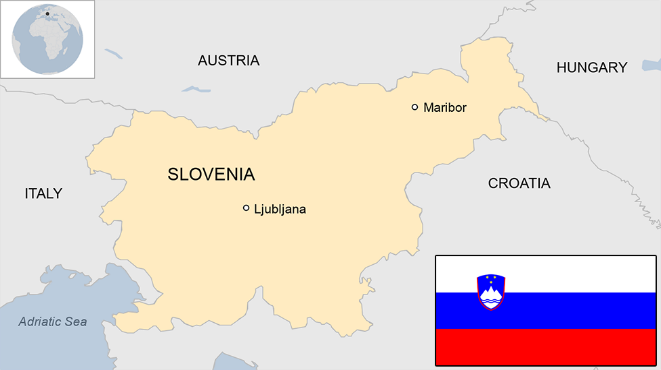
- 06 Aug 2025
In News:
Slovenia has announced a complete ban on the import, export, and transit of weapons to and from Israel in response to Israel’s military actions in Gaza. This makes it the first European Union (EU) member state to enforce a blanket arms embargo on Israel.
Context and Diplomatic Stand
- Slovenia has frequently criticized Israel for alleged atrocities in Gaza.
- In June 2024, Slovenia’s parliament recognisedPalestinian statehood, joining Ireland, Norway, and Spain.
- In July 2024, it barred two far-right Israeli ministers from entering the country, citing “incitement of violence” and “genocidal statements.”
- Although Slovenia’s arms trade with Israel is minimal, the decision carries symbolic diplomatic weight, intended to pressure Israel amid growing international condemnation.
Other European countries have taken partial measures:
- UK (2024): Suspended export of some weapons that could breach international law.
- Spain (2023): Halted arms sales.
- Netherlands, France, Belgium: Tightened regulations or faced legal challenges, but none imposed a total embargo like Slovenia.
Slovenian Prime Minister Robert Golob emphasized that Slovenia would act unilaterally in the absence of collective EU action, accusing the EU of disunity in addressing the humanitarian crisis in Gaza.
About Slovenia
- Location: Central Europe; formerly part of Yugoslavia.
- Capital: Ljubljana.
- Borders: Austria, Hungary, Croatia, Italy; coastline along the Adriatic Sea (Gulf of Venice).
- Memberships: Joined EU and NATO in 2004; uses the Euro.
- Physical Features:
- Alpine Highlands (~40% of territory) – includes Julian Alps, Karavanke, Kamnik-Savinja Alps. Highest peak: Mount Triglav (2,864 m).
- Karst Plateau – globally renowned for caves, sinkholes, underground rivers.
- Subpannonian Plains – fertile alluvial soils; rivers Sava, Drava, Mura drain toward the Danube.
- Slovene Littoral – 47 km coastline; major port Koper.
Financial Sector Changes from August 2025
- 06 Aug 2025
In News:
India’s financial ecosystem is undergoing significant operational changes aimed at strengthening stability, efficiency, and consumer protection. From August 1, 2025, several regulatory and institutional reforms—spanning digital payments, credit cards, fuel pricing, trading hours, and monetary policy—are set to reshape the financial landscape.
UPI Operational Reforms by NPCI
The National Payments Corporation of India (NPCI), which manages the Unified Payments Interface (UPI), has introduced revised operational rules to reduce transaction delays and prevent system overload during peak hours. UPI, India’s flagship digital payment platform, has emerged as the backbone of cashless transactions with over 14 billion monthly transactions (2025 data).
Key reforms effective from August 1, 2025:
- Balance Check Limit: Maximum 50 balance enquiries per day per app.
- Linked Account Enquiries: Limited to 25 per day per app.
- Auto-Pay Transactions: Permitted only during non-peak hours (before 10 AM, 1–5 PM, after 9:30 PM).
- Transaction Status Checks: Restricted to 3 per transaction, with a mandatory 90-second gap.
- Beneficiary Name Display: Recipient’s registered bank name will be shown before confirmation to curb fraud.
These reforms reflect an effort to balance user convenience with systemic efficiency while reducing risks of fraudulent transfers.
Credit Card Insurance Changes by SBI
The State Bank of India (SBI), India’s largest lender, has announced withdrawal of complimentary air accident insurance cover on several co-branded credit cards. Earlier, insurance covers of ?1 crore (ELITE series) and ?50 lakh (PRIME/Platinum series) were provided. The discontinuation reflects banks’ attempts to rationalize costs in a competitive credit market, but it also raises concerns regarding customer protection.
Fuel Price Revisions
Prices of LPG cylinders, CNG, PNG, and aviation turbine fuel (ATF) are subject to monthly review. Effective August 1, 2025, fresh revisions are expected in line with global crude trends and domestic subsidy policies. Given that LPG and CNG are crucial for households and transport, even marginal adjustments influence inflation and consumer spending.
Extension of Trading Hours
The Reserve Bank of India (RBI) has extended trading hours for money market instruments to deepen liquidity and align with global practices:
- Call Money Market: Extended to 9:00 AM – 7:00 PM (effective July 1, 2025).
- Market Repo & Tri-Party Repo (TREPs): Extended to 9:00 AM – 4:00 PM (effective August 1, 2025).
This reform is expected to improve liquidity management for banks and non-banking financial institutions, enhancing the efficiency of short-term borrowing and lending.
Apna Ghar Initiative
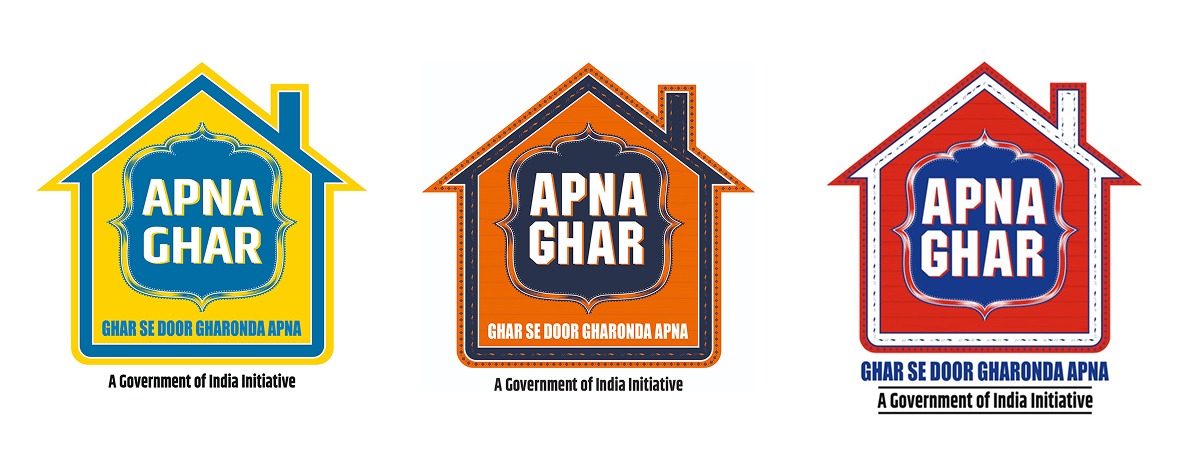
- 05 Aug 2025
In News:
The Ministry of Petroleum and Natural Gas has launched ‘Apna Ghar’, a nationwide initiative to provide resting facilities for truck drivers along highways. The programme, launched in 2025, aims to enhance road safety, driver well-being, and logistics efficiency, addressing the long-standing issue of fatigue and poor hygiene conditions faced by India’s trucking workforce.
Key Features of Apna Ghar
- Coverage: As of July 1, 2025, 368 units with 4,611 beds have been set up at retail fuel outlets along national and state highways by Public Sector Oil Marketing Companies (OMCs).
- Facilities Provided:
- Dormitories (10–30 beds per unit)
- Clean toilets and dedicated bathing areas (Houdas)
- Restaurants/dhabas and self-cooking spaces
- Purified drinking water access
- Technology Integration: Launch of the ‘Apna Ghar’ mobile app for bookings, user feedback, and engagement.
- Implementation Model: Public sector OMCs build and manage facilities at fuel retail stations, ensuring accessibility to drivers during long-haul journeys.
Objectives and Significance
- Road Safety: Reduces driver fatigue, a major cause of road accidents.
- Worker Welfare: Provides dignified working and resting conditions for truckers, a vital yet often informal part of India’s transport ecosystem.
- Economic Impact: Supports supply chain resilience by improving the productivity and well-being of drivers.
- Social Development: Aligns with Sustainable Development Goal 8 (Decent Work and Economic Growth) by promoting safe and humane working environments.
National Waterway-57 (River Kopili)
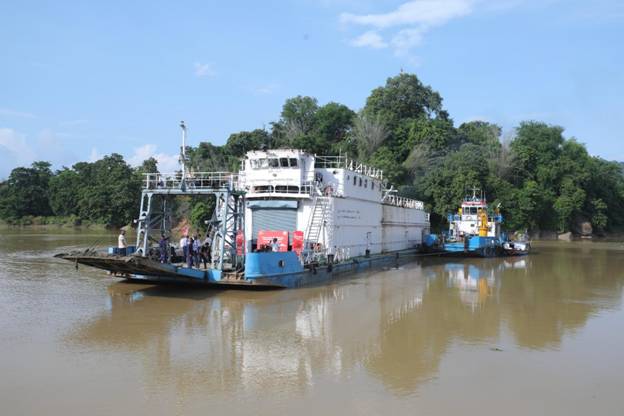
- 05 Aug 2025
In News:
In a landmark development for sustainable logistics in the Northeast, the Kopili River (National Waterway-57) was operationalised with the maiden cargo movement of 300 MT of cement from Chandrapur (Kamrup) to Hatsingimari (South Salmara, Assam).
About the Kopili River
- Origin:Saipong Reserve Forest in the Borail Range, North Cachar Hills, at 1,525 m altitude.
- Length: 256 km (78 km along the Assam–Meghalaya border; 178 km in Assam).
- Basin Coverage: Flows through Meghalaya and Assam, making it an interstate river.
- Significance: Largest south bank tributary of the Brahmaputra in Assam; traverses North Cachar Hill, KarbiAnglong, Nagaon, and Morigaon districts.
- Agricultural Zone: Supports cultivation of rice (winter, summer, autumn), wheat, mustard, and rapeseed in Kamrup and surrounding areas.
Strategic and Policy Significance
- Economic Impact: Reduces road congestion, lowers logistics costs, and provides an efficient alternative for bulk cargo. The trial run replaced the equivalent of 23 truckloads of cement.
- Environmental Gains: Inland water transport curbs emissions and promotes sustainable logistics.
- Regional Development: Enhances connectivity for riverine communities, boosts trade, and unlocks economic opportunities in Assam.
- National Integration: Aligns with Maritime India Vision 2030 and PM Gati Shakti, which seek to create multimodal, integrated transport infrastructure.
Pradhan Mantri National Dialysis Programme (PMNDP)

- 05 Aug 2025
In News:
The Pradhan Mantri National Dialysis Programme (PMNDP) has been significantly expanded by the Government of India and is now operational in all 36 States and Union Territories, covering 751 districts. As of June 30, 2025, a total of 1,704 dialysis centres are functional under the programme.
Background and Objectives
- Launched in 2016, the PMNDP aims to provide free dialysis services to patients suffering from end-stage kidney failure, with special focus on Below Poverty Line (BPL) beneficiaries.
- It is implemented under the National Health Mission (NHM) in Public-Private Partnership (PPP) mode.
- The programme addresses the rising burden of chronic kidney disease and aims to ensure equitable access to life-saving renal care across India.
Key Features
- Dialysis Services: Supports both Haemodialysis and Peritoneal Dialysis.
- Infrastructure Expansion: Initially recommended at all district hospitals, with flexibility to scale down to Community Health Centres (CHCs), especially in remote and tribal regions.
- PMNDP Portal: Integrates all NHM-supported dialysis centres, facilitates creation of a renal registry, and ensures service portability within states (“One State–One Dialysis”) and eventually nationwide (“One Nation–One Dialysis”).
- Funding Mechanism: The NHM provides financial assistance to States/UTs for setting up and operating dialysis centres.
- Implementation Strategy: Expansion is based on gap assessments carried out by States/UTs as part of their annual Programme Implementation Plans (PIPs).
Significance
- Health Equity: Extends life-saving kidney care to vulnerable groups, including rural and tribal populations.
- Cost Reduction: Provides free dialysis, reducing the out-of-pocket burden on families.
- Data Integration: The renal registry aids in epidemiological tracking and planning of kidney health interventions.
- Public Health Impact: Strengthens India’s healthcare delivery under Universal Health Coverage (UHC) goals.
‘Matri Van’ initiative
- 05 Aug 2025
In News:
The Government of India has launched the ‘Matri Van’ initiative in Gurugram under the ‘Ek Ped MaaKe Naam’ programme, symbolizing ecological preservation and community participation. The project was inaugurated by the Union Minister for Environment, Forest and Climate Change, Shri Bhupender Yadav, and the Union Minister for Housing and Urban Affairs and Power, Shri Manohar Lal, during Van Mahotsav 2025.
About the Initiative
- Location & Scale: Spread over 750 acres in the Aravalli hill area along the Gurugram-Faridabad road.
- Concept: A theme-based urban forest aimed at nurturing generations through mother-nature-inspired green efforts.
- Vision: To enhance biodiversity, public well-being, and urban sustainability, while serving as the “heart and lung of Delhi-NCR.”
- Collaboration: Developed through multi-stakeholder participation, including CSR partners, Resident Welfare Associations (RWAs), NGOs, MNCs, school children, and government bodies.
Ecological and Social Significance
- Restoration of degraded land by removing invasive Kabuli Kikar (Prosopis juliflora).
- Plantation of native Aravalli species such as Dhak, Amaltash, Neem, Bargad, Peepal, Gullar, Pilkhan, Khair, Semal, and bamboo.
- Development of theme-based groves, including:
- Bodhi Vatika (sacred fig species like Bargad, Peepal),
- Bamboosetum (bamboo species),
- Aravalli Arboretum,
- PushpVatika (flowering trees),
- Sugandh Vatika (fragrant species),
- Medicinal Plants Vatika,
- Nakshatra and RashiVatika,
- Cactus Garden,
- Butterfly Garden.
Facilities and Infrastructure
- Eco-tourism and community spaces: nature trails, cycle tracks, yoga zones, gazebos, and sitting areas.
- Environmental safeguards: treated water irrigation systems, sprinklers, and waterbodies to aid water conservation and urban flood prevention.
- Urban amenities: parking spaces, public facilities, and accessibility features.
Broader Environmental Vision
- Linked to Mission LiFE (Lifestyle for Environment) with components like:
- Saving food, water, and energy,
- Solid waste and e-waste management,
- Ban on single-use plastics,
- Promotion of healthy lifestyles.
- Complements India’s renewable energy transition, with non-fossil fuel power now accounting for over 50% of the national energy mix.
- Supports Prime Minister’s vision of rejuvenating the Aravalli ecosystem through plantation of native species.
Significance for Delhi-NCR
- Acts as a natural carbon sink to counter rising emissions.
- Provides a green lung to improve air quality in a highly polluted urban region.
- Promotes eco-tourism and environmental education through biodiversity parks, wildlife safaris, and thematic groves.
- Offers citizens a serene, stress-free environment, strengthening the image of Gurugram as a model “Millennium City.”
Investor Education and Protection Fund Authority (IEPFA)
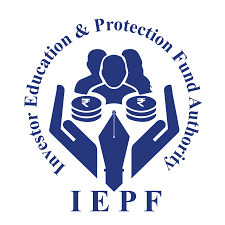
- 05 Aug 2025
In News:
The Investor Education and Protection Fund Authority (IEPFA), established in 2016 under the Companies Act, 2013, functions under the Ministry of Corporate Affairs (MCA) with the mandate of safeguarding investor interests, refunding unclaimed financial assets, and promoting financial literacy across India.
Mandate and Fund Structure
The Investor Education and Protection Fund (IEPF) consists of amounts that remain unclaimed for seven years, including:
- Unpaid dividends,
- Application money due for refund,
- Matured deposits and debentures,
- Accrued interest on investments,
- Grants and donations received from government or other entities.
The fund is utilized to refund unclaimed shares/dividends to rightful investors and to spread financial awareness among citizens.
Recent Developments: Integrated Portal
IEPFA is in the final phase of testing its Integrated Portal, a unified digital platform aimed at:
- Streamlining claim processes for unclaimed shares/dividends,
- Enhancing accessibility for both investors and companies,
- Integrating stakeholders such as depositories and the Public Financial Management System (PFMS).
Companies have been urged to upload their IEPF-1/7 SRNs with prescribed templates to enable smooth data verification and claim processing.
Key Features of the New System
- Simplified claims for low-value refunds through reduced documentation.
- Integrated Call Center to strengthen grievance redressal and ensure responsive communication with stakeholders.
- Temporary disruptions may occur during transition, but the reforms promise faster, transparent, and investor-friendly outcomes.
Investor Awareness Initiatives
IEPFA also undertakes extensive financial literacy campaigns through programs like:
- Niveshak Didi,
- Niveshak Panchayat,
- NiveshakShivir.
These initiatives empower citizens, particularly in rural and semi-urban areas, to make informed financial decisions and protect themselves from fraud and mismanagement.
Significance
- For Investors: Easier access to unclaimed assets and improved grievance redressal.
- For Companies: Structured compliance framework and digital integration with regulators.
- For Governance: Strengthens India’s financial ecosystem by combining investor protection with financial literacy.
Nahargarh Wildlife Sanctuary
- 04 Aug 2025
In News:
The Rajasthan Forest Department has recently redrawn the boundaries of the Nahargarh Wildlife Sanctuary (NWS), located near Jaipur, sparking controversy among conservationists and legal experts. The move, alleged to benefit luxury hotels and commercial establishments within the sanctuary and its Eco-Sensitive Zone (ESZ), has raised questions about legality, ecological safeguards, and governance.
About Nahargarh Wildlife Sanctuary
- Location: ~20 km from Jaipur, under the Aravalli range.
- Size: Originally ~720 hectares; currently notified as 6,025.74 hectares across 16 villages.
- History: Named after Nahargarh Fort, built by Maharaja Sawai Jai Singh II in the 18th century.
- Nahargarh Biological Park: Part of the sanctuary, noted for its lion safari.
- Flora: Dry deciduous forests, scrublands, grasslands.
- Fauna: Leopards, deer, sloth bears, wild boars, lions, tigers, reptiles like pythons and monitor lizards, and diverse birdlife including owls, eagles, and peacocks.
The Controversy
- Procedural Lapses
- Under Section 26A of the Wildlife Protection Act, 1972, any change in sanctuary boundaries requires approval from the National Board for Wildlife (NBWL).
- Experts cite the 2013 Supreme Court judgment (Centre for Environmental Law, WWF-India vs Union of India), which mandated NBWL clearance for altering protected area limits.
- However, Rajasthan submitted revised maps to the National Green Tribunal (NGT) in July 2025 without NBWL’s recommendation.
- Alleged Motivations
- Activists claim the revised map excludes “Described Areas” (revenue lands held by public and private bodies) while retaining only Reserved Forest patches.
- This adjustment allegedly protects existing luxury hotels and other constructions in the ESZ, some of which earlier faced demolition orders for violations.
- Government’s Justification
- Officials argue the 1980 notification used “grossly approximate” boundary descriptions.
- Over four decades, urbanisation and topographical changes blurred the original limits.
- A GIS-based remapping exercise using high-resolution satellite imagery and land records was undertaken, and state approval was granted in July 2025.
BlueBird Communications Satellite
- 04 Aug 2025
In News:
Following the successful NISAR (NASA–ISRO Synthetic Aperture Radar) mission, the Indian Space Research Organisation (ISRO)is preparing for its next major collaboration with the United States: the launch of the BlueBird communications satellite. The mission highlights India’s growing role as a reliable global launch partner and the expanding scope of Indo–U.S. space cooperation.
The BlueBird Satellite
- Developer: U.S.-based AST SpaceMobile
- Type: Advanced communications satellite designed for direct satellite-to-smartphone connectivity
- Weight: ~6,000 kg
- Antenna: Innovative 64-square-metre antenna array for high-capacity communication
- Orbit: Low Earth Orbit (LEO)
- Technology:
- Enables direct calling and broadband access from space without the need for ground-based mobile towers
- Supports beams up to 40 MHz capacity
- Offers peak speeds of up to 120 Mbps
- Service Plan: After deployment, BlueBird satellites will provide non-continuous broadband cellular service initially in the U.S. and select global markets.
Launch Details
- Launch Vehicle: LVM3 (Launch Vehicle Mark-3), ISRO’s heaviest rocket, formerly known as GSLV Mk-III
- Launch Site: Satish Dhawan Space Centre, Sriharikota
- Timeline: Expected launch in the next 3–4 months (as per ISRO chairman V. Narayanan)
Strategic Significance
- For India–U.S. Cooperation:
- Follows the joint NISAR Earth observation mission, reinforcing strategic space ties.
- Strengthens India’s position as a preferred partner for global commercial satellite launches.
- For India’s Space Economy:
- Enhances ISRO’s reputation in heavy-lift commercial launches, particularly with LVM3.
- Showcases India’s cost-effective access to space, attracting further foreign collaborations.
- For Global Communication Technology:
- Marks a breakthrough in direct-to-device (D2D) connectivity, reducing dependency on ground infrastructure.
- Could help expand mobile and broadband coverage to remote and underserved regions worldwide.
Oreshnik Hypersonic Missile
- 04 Aug 2025
In News:
In August 2025, Russian President Vladimir Putin announced that the Oreshnik hypersonic missile—a new-generation intermediate-range ballistic missile—has entered production and military service. Plans are underway to deploy the system in Belarus by the end of 2025, signalling a major escalation in Russia’s standoff with NATO amid the Ukraine conflict.
Key Features
- Type: Intermediate-range, solid-fuel, mobile, hypersonic ballistic missile
- First Operational Use: November 2024, in a strike on Ukraine’s Pivdenmashdefence facility at Dnipro
- Speed: Capable of reaching Mach 10 (10 times the speed of sound)
- Range: Approx. 5,000 km (3,100 miles), bringing the entirety of Europe within its strike zone
- Warhead Capability:
- Carries conventional or nuclear warheads
- Equipped with Multiple Independently Targetable Re-entry Vehicles (MIRVs), allowing simultaneous strikes on multiple targets
- Strategic Advantage: Hypersonic speed, mid-flight manoeuvrability, and MIRV capability make it virtually immune to interception by current Western missile defence systems
Strategic Context
- Belarus as a Forward Base:
- Belarus shares a 673-mile border with Ukraine, making it strategically vital.
- It already hosts Russian troops and tactical nuclear weapons.
- Deployment of Oreshnik here allows Moscow to project power deeper into Europe.
- Nuclear Security Pact (2023):
- Russia and Belarus signed an agreement placing Belarus under Russia’s nuclear umbrella.
- Russia retains the right to use nuclear weapons stationed in Belarus if “aggression” is perceived.
- Belarus has reportedly hosted “several dozen” Russian nuclear weapons since late 2024.
- Geopolitical Implications:
- Russia warned NATO against supplying Ukraine with long-range weapons capable of striking inside Russia.
- Putin cautioned that Russia could retaliate with systems like Oreshnik “even beyond Ukraine.”
- By suggesting that conventional Oreshnik strikes could be as devastating as nuclear attacks, Moscow is raising deterrence levels against the West.
Implications for Global Security
- Erosion of Arms Control: With the collapse of Cold War-era treaties like the INF Treaty (1987), weapons such as Oreshnik operate in a largely unregulated environment.
- Escalation of NATO–Russia Rivalry: The missile’s deployment in Belarus expands Russia’s strike capability across Europe, heightening NATO security concerns.
- Nuclear Threshold Ambiguity: Oreshnik’s dual capability (conventional and nuclear) blurs the line between conventional warfare and nuclear escalation.
- Arms Race in Hypersonics: The U.S., China, and other powers are also developing hypersonic weapons, intensifying competition in next-generation strategic arms.
Polavaram–Banakacherla Link Project (PBLP)
- 04 Aug 2025
In News:
The bifurcation of Andhra Pradesh in 2014 created prolonged disputes between Andhra Pradesh (AP) and Telangana over sharing the waters of the Krishna and Godavari rivers. Issues have resurfaced with Andhra Pradesh’s proposal of the Polavaram–Banakacherla Link Project (PBLP), opposed by Telangana on legal and ecological grounds.
In July 2025, the Union Government decided to set up two dedicated river management boards—the Krishna River Management Board (KRMB) at Amaravati and the Godavari River Management Board (GRMB) at Hyderabad. Both will include Central officials, technical experts, and representatives from the two states.
Polavaram–Banakacherla Link Project (PBLP)
- Objective: Divert 200 TMC of surplus Godavari floodwaters to drought-prone Rayalaseema by linking the Polavaram reservoir to the Banakacherla regulator in Kurnool district.
- Water Transfer Mechanism:
- Draw water from Polavaram Dam
- Convey through Prakasam Barrage → lift to Bollapalli reservoir
- Tunnel through the Nallamala hills → release into Banakacherla reservoir
- Significance: Strengthens irrigation, drinking water supply, and agricultural sustainability; aligns with national schemes such as Jal Jeevan Mission, Blue Revolution, and Make in India.
Telangana’s Concerns
- Violation of the Andhra Pradesh Reorganisation Act, 2014 – which requires prior approval of the Apex Council, KRMB, and CWC for new inter-state river projects.
- Disputed “Surplus” Claim – Telangana contests Andhra’s claim of 200 TMC surplus Godavari waters, arguing no adjudicatory body has approved such diversion.
- Environmental and Legal Clearances – Though the Polavaram Project got clearance in 2005, the Expert Appraisal Committee has called for fresh scrutiny, especially due to submergence concerns in Odisha and Chhattisgarh.
- Unauthorised Inter-Basin Diversion – Godavari-to-Krishna transfer without mutual consent could undermine Telangana’s own projects.
- Breach of Cooperative Federalism – Telangana sees unilateral action by Andhra as bypassing consensus-driven water governance.
Consensus Achieved in July 2025 Talks
- Telemetry Systems: Both states agreed to install real-time monitoring devices at reservoirs and projects to ensure transparency in water usage.
- Srisailam Project Repairs: Andhra agreed to undertake crucial maintenance at this shared project.
- Board Reorganisation: KRMB’s office to shift to Amaravati/Vijayawada for better oversight.
- Joint Committee: High-level committee of central, state, and technical experts to study outstanding issues and recommend equitable solutions.
Legal and Institutional Mechanisms for Inter-State Water Disputes
- Constitutional Provisions:
- Article 262: Parliament may legislate for adjudication of inter-state water disputes; can also bar courts’ jurisdiction.
- State List (Entry 17): States control water-related issues.
- Union List (Entry 56): Centre can regulate inter-state rivers in the national interest.
- Statutory Framework:
- River Boards Act, 1956: Allows River Boards for coordinated development; not implemented in practice.
- Inter-State Water Disputes Act, 1956: Provides for tribunals. Amendments in 2002 mandated quicker constitution of tribunals (1 year) and decisions within 3 years.
- Judicial Role: Despite Article 262(2), the Supreme Court has intervened in interpretation and implementation of tribunal awards (e.g., Mahadayi Water Dispute, 2018).
A New Approach to Treating Liver Cirrhosis
- 04 Aug 2025
In News:
A team of Indian scientists may have found a way to improve the drainage capacity of lymphatic vessels in the liver and intestine that fails in case of cirrhosis, by using nanocarriers filled with a powerful protein called VEGF-C.
Understanding Liver Cirrhosis
Cirrhosis is the advanced stage of chronic liver disease where healthy tissue is replaced by scar tissue due to prolonged inflammation. This structural distortion affects both blood and lymphatic vessels in the liver and intestine, impairing circulation and fluid balance.
Causes:
- Excessive alcohol consumption
- NASH (Non-Alcoholic Steato-Hepatitis)
- Chronic viral infections such as Hepatitis B and C
Symptoms (often in advanced stages): extreme fatigue, loss of appetite, easy bruising or bleeding, swelling in legs/ankles (edema), and abdominal fluid accumulation (ascites).
The Problem of Lymphatic Dysfunction
In cirrhosis, lymphatic vessels (mesenteric lymphatic vessels or mLVs) become dilated and dysfunctional. Normally, these vessels drain interstitial fluid, proteins, and immune cells back into venous blood.
- In cirrhosis, lymph production increases nearly 30-fold due to portal hypertension and liver congestion.
- Dysfunctional lymph flow leads to ascites (abdominal fluid buildup), one of the most serious complications of decompensated cirrhosis.
- Currently, there is no effective therapy to correct this lymphatic dysfunction.
The VEGF-C Based Breakthrough
A joint team from the Institute of Liver and Biliary Sciences (ILBS), New Delhi and the National Institute of Pharmaceutical Education and Research (NIPER), Guwahati has developed a novel therapy using Vascular Endothelial Growth Factor-C (VEGF-C).
- Role of VEGF-C: A key pro-lymphangiogenic factor that binds to VEGFR-3 receptors, stimulating the growth of new lymphatic vessels and enhancing drainage.
- Challenge: VEGF-C has a short half-life, is hydrophilic, and can cause systemic side effects.
The Innovation: Nanocarriers
- Scientists at NIPER designed reverse micelle-based nanocarriers to encapsulate VEGF-C, ensuring targeted delivery to gut lymphatic vessels.
- These nanocarriers specifically bind to VEGFR-3 homodimers, maximizing efficacy and minimizing side effects.
- The formulation was delivered orally in animal models, ensuring uptake by intestinal lymphatic vessels.
Findings (Animal Studies)
- Significant increase in mesenteric lymph drainage
- Reduction in ascites and portal hypertension
- Enhanced cytotoxic T-cell immunity in lymph nodes
- Reduction in local and systemic bacterial load
Significance and Future Prospects
- This is the first study to demonstrate that therapeutic lymphangiogenesis using VEGF-C can reconstruct fragmented lymphatic networks and restore function in advanced cirrhosis.
- Funded by the DST Nano Mission and published in JHEP Reports, it marks a major step in translational medicine.
- Next steps: Preclinical studies in larger animals, followed by human clinical trials to establish safety, dosage, and efficacy.
Indo-Burma Ramsar Regional Initiative (IBRRI)
- 03 Aug 2025
In News:
The 15th Conference of the Parties (COP15) to the Ramsar Convention concluded with a significant side event of the Indo-Burma Ramsar Regional Initiative (IBRRI), highlighting collaborative efforts for wetland conservation and restoration across Southeast Asia.
About IBRRI
- Origin: Jointly developed by the Ramsar National Focal Points of Cambodia, Lao PDR, Myanmar, Thailand, and Viet Nam, with technical support from the IUCN Asia Regional Office.
- Aim: To coordinate and support the implementation of the Strategic Plan of the Ramsar Convention, particularly in addressing wetland degradation.
- Support: Backed by IUCN’s BRIDGE (Building River Dialogue and Governance) project, which promotes sustainable water management, biodiversity conservation, and cross-border cooperation.
Governance Structure
To ensure oversight, transparency, and inclusivity, IBRRI has developed a multi-tiered governance framework:
- Steering Committee: Comprising Ramsar Administrative Authorities from the five member countries.
- Secretariat: Hosted by the IUCN Asia Regional Office, Bangkok.
- Stakeholder Committee: Provides technical and strategic guidance, ensuring multi-stakeholder participation including governments, NGOs, and civil society.
Strategic Plan 2025–2030
- Launch: Officially unveiled during COP15 as a transboundary framework for wetland management.
- Objective: To halt and reverse wetland loss across member states through restoration, sustainable use, and regional cooperation.
- Approach: Promotes knowledge exchange, policy coordination, and joint action for wetland conservation.
About BRIDGE Project
- Aim: To strengthen transboundary water governance by catalysingsustainable management of shared rivers, ensuring water security, conserving biodiversity, and fostering peaceful cooperation across borders.
Significance
- Provides a regional mechanism for Ramsar Convention implementation.
- Enhances transboundary cooperation in the Indo-Burma region, which hosts critical wetland ecosystems.
- Contributes to biodiversity conservation, climate resilience, and sustainable development goals (SDGs).
Darwin Tree of Life (DToL) Project
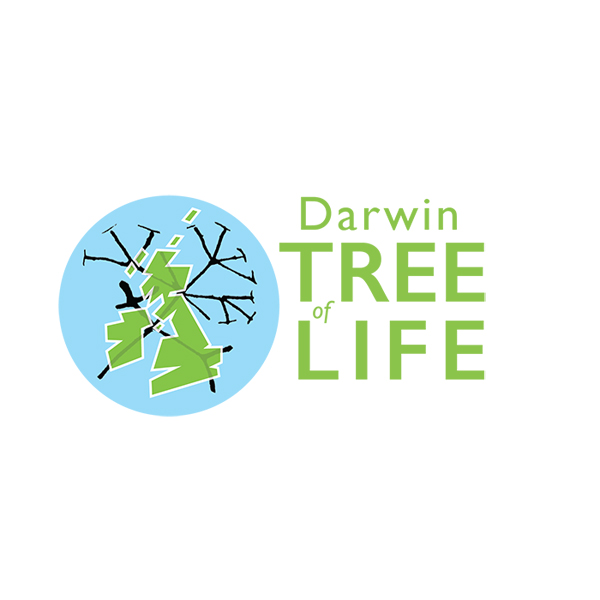
- 03 Aug 2025
In News:
The Darwin Tree of Life (DToL) project is nearing the completion of its first phase and represents one of the most ambitious scientific efforts to decode the diversity of life on Earth. Focused on sequencing the genomes of all eukaryotic species in Britain and Ireland, the project is a cornerstone of the global Earth BioGenome Project (EBP).
About the Project
- Objective: To generate high-quality genome sequences of around 70,000 eukaryotic species including animals, plants, fungi, and protists.
- Approach: Careful collection of representative samples, application of advanced DNA sequencing technologies, and use of computational tools to understand how genetic code drives biological diversity.
- Collaboration: A joint initiative involving ten biodiversity, genomics, and data analysis partners.
What are Eukaryotes?
- Definition: Organisms with complex cells that have a well-defined nucleus enclosed by a membrane, along with organelles such as mitochondria and Golgi apparatus.
- Examples: Protists, plants, fungi, and animals.
- Distinctive Features:
- Possess chromosomes inside the nucleus.
- Reproduce asexually (mitosis) or sexually (meiosis + gamete fusion).
- Contrast with Prokaryotes: Unlike bacteria and archaea, eukaryotes are structurally advanced due to compartmentalized cell functions.
The Earth BioGenome Project (EBP)
- Vision: A global initiative to sequence, catalogue, and analyse the genomes of all known eukaryotic species on Earth.
- Timeline: 10 years.
- Network: Collaborative effort involving scientists, institutions, and multiple regional projects like DToL.
Significance:
- Scientific Advancement
- Provides a genomic foundation for understanding biodiversity, evolution, and taxonomy.
- Helps uncover how genetic variations translate into ecological and physiological adaptations.
- Conservation and Sustainability
- Offers data vital for protecting endangered species and ecosystems.
- Assists in addressing biodiversity loss and supporting global conservation strategies.
- Applications in Human Development
- Medicine: Discovery of new genes for disease resistance or therapeutic innovations.
- Agriculture: Identification of traits for crop resilience and productivity.
- Biotechnology:Utilisation of unique biological pathways for industrial and environmental applications.
Human Outer Planet Exploration (HOPE)
- 03 Aug 2025
In News:
- India has taken a decisive step in advancing its space exploration ambitions with the launch of theHuman Outer Planet Exploration (HOPE) analogue station in Ladakh’s Tso Kar region.
- Developed by Bengaluru-based space science company Protoplanet in collaboration with the Indian Space Research Organisation (ISRO), the station is designed to simulate extra-terrestrial conditions, closely mimicking the geological and environmental features of the Moon and Mars.
What is HOPE?
- Analogue Station Concept: An analogue research station replicates planetary conditions to test technologies, study human adaptability, and conduct crew training. Globally, there are 33 such facilities, including BIOS-3 (Russia), HERA (USA), SHEE (Europe), and the Mars Desert Research Station (Utah, USA).
- Location & Conditions: Situated at an altitude of over 14,500 feet, Tso Kar offers a cold desert and high-altitude environment, chosen after nine years of study. Its extreme terrain makes it an “exceptional analogue site” for simulating extraterrestrial challenges.
- Mission Objective: HOPE aims to generate insights into human adaptability, resilience, and technology readinessfor sustained human presence beyond Earth.
Research and Operations
From August 1, 2025, selected crew members will undergo 10-day isolation missions inside the station. They will be subject to:
- Physiological studies – monitoring body adaptation in extreme conditions.
- Psychological studies – assessing mental resilience during confinement.
- Epigenetic research – studying biological changes in response to stress and environment.
Significance for India
- Strengthening Human Spaceflight Programme: This initiative provides critical data on crew adaptability for long-duration missions, supporting India’s vision of human exploration.
- Policy Alignment: The mission aligns with Prime Minister Narendra Modi’s announcement of establishing the BharatiyaAntariksh Station by 2035 and launching a manned Moon mission by 2040.
- Global Context: While NASA is targeting a manned mission to Mars by the 2030s, India is positioning itself as a rising player in deep-space exploration.
Strategic Importance
- Scientific Gains: HOPE will aid in technology validation, geological studies, life-detection research, and habitability assessments.
- International Standing: India joins the select group of countries operating analogue research stations, strengthening its credibility in interplanetary exploration.
- Capacity Building: The project helps build indigenous expertise in crew training, mission simulations, and psychological conditioning, paving the way for sustained space presence.
OECD Report on Plastic Pollution in Southeast & East Asia
- 03 Aug 2025
In News:
The Organisation for Economic Cooperation and Development (OECD) has warned that plastic use and waste in Southeast and East Asia could nearly double by 2050 unless countries adopt urgent and stringent policy measures. The findings are particularly significant as they coincide with the final round of UN negotiations on a global plastics treaty scheduled in August 2025 in Geneva.
Key Findings of the OECD Report
1. Surge in Plastic Use and Waste
- Plastic consumption in the ASEAN Plus Three (APT) region – which includes ASEAN-10 (Brunei, Cambodia, Indonesia, Laos, Malaysia, Myanmar, Philippines, Singapore, Thailand, Vietnam) plus China, Japan, and South Korea – is projected to rise from 152 million tonnes (2022) to 280 million tonnes (2050).
- Plastic waste will increase from 113 million tonnes (2022) to 242 million tonnes (2050).
- Packaging waste alone will almost double, from 49 million tonnes to 91 million tonnes.
2. Regional Disparities
- China will see the largest absolute rise, from 76 million tonnes (2022) to 160 million tonnes (2050).
- Lower-middle-income ASEAN nations such as Indonesia, Vietnam, and the Philippines will see the sharpest relative increase, with plastic waste nearly quadrupling from 7.5 million tonnes to 28 million tonnes.
3. Mismanaged Waste and Leakage
- Share of mismanaged plastic waste may fall (29% → 23% between 2022–2050), but total mismanaged waste will grow from 33 million tonnes to 56 million tonnes.
- The region is already the largest contributor to global plastic leakage – 8.4 million tonnes in 2022 (one-third of global leakage), projected to rise to 14.1 million tonnes by 2050.
- Plastic build-up:
- Freshwater systems: from 57 million tonnes (2022) → 126 million tonnes (2050).
- Oceans: from 17 million tonnes (2022) → 55 million tonnes (2050).
4. Climate Implications
- Greenhouse gas emissions from the plastic lifecycle (production + waste management) in the APT region are expected to nearly double from 0.6 GtCO?e (2022) to over 1 GtCO?e (2050).
Global High Stringency Scenario: Pathway to Solutions
OECD outlines a Global High Stringency (GHS) policy scenario that can reverse the trajectory:
- Plastic use: Could drop by 28% by 2050.
- Plastic waste: Could fall by 23%.
- Recycling: Average recycling rate could reach 54%, with secondary plastics meeting all future demand growth.
- Mismanaged waste: Could decline by 97%, drastically reducing environmental leakage.
Key recommended measures:
- Phase out single-use plastics.
- Strengthen waste collection systems and invest in recycling infrastructure.
- Promote circular economy approaches and regional cooperation.
Regional and Global Implications
- Cross-border challenge: Plastics persist for decades and move across boundaries. Poorer ASEAN nations like Indonesia often receive waste leakage from wealthier neighbours and China, with spillover impacts reaching the Indian Ocean and African coasts.
- Climate risks: Rising plastic demand intensifies emissions, undermining climate action goals.
- Global treaty negotiations: The report’s timing strengthens the case for an ambitious legally binding plastics treaty.
ICJ Ruling on the Kyoto Protocol
- 03 Aug 2025
In News:
In a landmark advisory opinion, the International Court of Justice (ICJ) has clarified that the Kyoto Protocol (1997) remains legally valid and binding, even after the Paris Agreement (2015) came into effect. This ruling has revived the Protocol’s legal relevance and has far-reaching implications for international climate law and global climate governance.
Background: The Kyoto Protocol
- Adopted: 1997; Entered into force: 2005 under the UN Framework Convention on Climate Change (UNFCCC).
- Nature: First binding international treaty mandating emission reductions by industrialised nations (Annex-I countries).
- Principle: Based on Common but Differentiated Responsibilities and Respective Capabilities (CBDR–RC), recognising that developed nations bear greater responsibility due to their historical emissions.
- Commitment Periods:
- First: 2008–2012
- Second: 2012–2020
- Obligations:
- Quantified emission reduction targets (from 1990 baseline).
- Provision of finance and technology transfer to developing nations.
- Market-based mechanisms such as the Clean Development Mechanism (CDM).
Why was Kyoto Considered Obsolete?
- US Non-Ratification: The largest historical emitter never joined the Protocol.
- Withdrawals: Countries like Canada and Japan later exited or refused binding targets.
- Rise of New Emitters: China overtook the US as the largest emitter by mid-2000s but, as a “developing country,” had no binding obligations.
- Shift to Paris Agreement (2015):
- Kyoto: Top-down, binding targets for developed countries.
- Paris: Bottom-up, voluntary Nationally Determined Contributions (NDCs) for all states.
- With no third commitment period defined after 2020, Kyoto was widely seen as defunct though never formally repealed.
ICJ’s Key Rulings
- Kyoto Still in Force: The absence of a new commitment period does not terminate the Protocol; it remains part of applicable international law.
- Legal Accountability: Non-compliance with emission reduction targets can constitute an “internationally wrongful act.”
- Retroactive Review: Past obligations (e.g., unfulfilled first commitment period targets) remain open for assessment.
- Advisory but Influential: Though not legally binding, the ruling strengthens grounds for climate litigation and accountability mechanisms.
Significance of the Ruling
- Legal Continuity: Confirms coexistence of Kyoto and Paris, rather than substitution.
- Revival of CBDR–RC: Re-emphasises differentiated responsibilities of developed nations, which Paris had diluted.
- Climate Justice: Opens the door for renewed scrutiny of historical emitters and their unfulfilled obligations.
- Litigation Pathways: Strengthens civil society and state efforts to seek compensation or stronger climate actions through international and domestic courts.
Implications for Global Climate Governance
- Developed countries face renewed legal and moral pressure to honour past commitments and extend finance and technology support.
- Developing nations gain a stronger footing to demand accountability for historical emissions.
- The ruling highlights the layered nature of international climate treaties, with Kyoto, UNFCCC, and Paris coexisting rather than replacing each other.
- It may reshape climate negotiations by reviving unfinished obligations under Kyoto while reinforcing Paris as the ongoing framework.
Piprahwa Relics
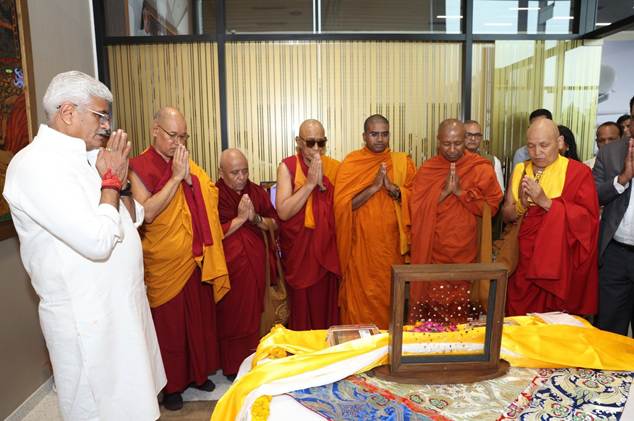
- 02 Aug 2025
In News:
The recent return of the sacred Piprahwa relics of Lord Buddha to India marks a landmark moment in India’s cultural diplomacy, heritage preservation, and spiritual history. Orchestrated by the Ministry of Culture in partnership with the Godrej Industries Group, this event prevented the relics’ auction in Hong Kong (May 2025) and instead restored them to their rightful home. For India, the land where the Buddha attained enlightenment and preached, this repatriation is more than a matter of archaeology—it reaffirms India’s role as the civilizational custodian of global heritage.
What are the Piprahwa Relics?
- Association: Believed to be the mortal remains of Lord Buddha, enshrined by the Sakya clan (his kinsmen) in the 3rd century BCE.
- Discovery: Excavated in 1898 by William Claxton Peppé, a British civil engineer and estate manager, from a stupa at Piprahwa, Uttar Pradesh, located just south of Lumbini (Buddha’s birthplace, now in Nepal).
- Contents:
- Bone fragments of the Buddha
- Caskets: soapstone, crystal, and sandstone coffer
- Offerings: gold ornaments, gemstones, and other ritual objects
- Inscription: A Brahmi script engraving on one of the caskets confirmed the relics’ identity, noting they were deposited by the Sakya clan.
Historical Journey of the Relics
- Colonial Appropriation (1898–1899)
- Following their discovery, the British Crown claimed the artefacts under the Indian Treasure Trove Act, 1878.
- The bone and ash relics were gifted to King Chulalongkorn of Siam (Thailand), reflecting colonial practices of cultural transfer.
- The majority of the remaining relics were placed in the Indian Museum, Kolkata (1899).
- Legal Protection
- Classified as ‘AA’ antiquities under Indian law, these relics cannot be sold, exported, or removed—underscoring their sacred and national significance.
- Attempted Auction in 2025
- The relics resurfaced in Hong Kong for an intended auction.
- Through timely diplomatic and legal intervention, supported by public-private partnership with the Godrej Group, the Ministry of Culture secured their return.
Significance of the Repatriation
1. Spiritual and Cultural Significance
- Buddhism, which spread from India across Asia, regards relics of the Buddha as sacred embodiments of peace, compassion, and enlightenment.
- The return reaffirms India as the spiritual homeland of Buddhism, strengthening cultural linkages with Buddhist-majority nations like Thailand, Myanmar, Japan, and Sri Lanka.
2. Archaeological and Historical Importance
- Piprahwa is one of the earliest archaeologically verified stupa sites.
- The discovery provides rare material evidence of Buddhist practices of relic veneration, confirming textual accounts in Buddhist scriptures.
3. Diplomatic and Soft Power Dimensions
- The move highlights cultural diplomacy as a tool of India’s foreign policy.
- India positions itself as a global guardian of Buddhist heritage, enhancing ties with Southeast Asian nations where Buddhism is deeply rooted.
4. Model of Public–Private Partnership
- The collaboration between the Government of India and the Godrej Industries Group sets a precedent for safeguarding heritage.
- It reflects how corporate social responsibility (CSR) can extend beyond business to civilizational legacy.
Supply and Use Tables 2020–21 & 2021–22
- 02 Aug 2025
In News:
Recently, the Ministry of Statistics and Programme Implementation (MoSPI) released the Supply and Use Tables (SUTs) for 2020–21 and 2021–22.
What are Supply and Use Tables?
SUTs consist of two interlinked matrices—Supply Tables and Use Tables, organized in a product-by-industry format.
- Supply Table: Captures total supply of goods and services, combining domestic production (at basic prices) and imports.
- Use Table: Reveals how these products are used across the economy—intermediate consumption, final consumption, capital formation, and exports (at purchasers’ prices).
Purpose & Significance of SUT
- Integration of GDP Approaches: SUT unifies production, income, and expenditure methods for GDP calculation, helping reconcile discrepancies between them.
- Robust Analytical Tool: Offers granular insights into product-industry dynamics, facilitating better policymaking and economic analysis.
- Data Reconciliation: Aligns macroeconomic estimates from sources like National Accounts Statistics (NAS), ASI, RBI, EXIM data, and census, improving coherence.
Data Coverage & Compilation Methodology
- Scope: Covers 140 products and 66 industries, at current prices, aligned with UN’s System of National Accounts (SNA).
- Key Steps:
- Identify industries (via NIC, NAS compilation categories) and products (via NPCMS for manufacturing, NPCSS for services).
- Compile Supply Table at basic prices; translate to purchasers’ prices using tax, margin, and CIF adjustments.
- Compile Use Table, detailing intermediate and final uses.
- Balance product supply and use to ensure consistency.
- Data Sources: NAS, ASI, EXIM, RBI, CBIC, MCA, Cost of Cultivation, etc.
Key Highlights
|
Metric |
2020–21 |
2021–22 |
|
Total Supply (Purchasers’ Prices) |
?407.52 lakh crore |
?523.08 lakh crore |
|
Sectoral Composition (basic prices) |
Agriculture: 11–13%, Mining: 2%, Manufacturing: 30–33%, Manufacturing-related services: 3%, Other Services: ~55% |
GVA-to-GVO Ratios (Efficiency Indicators)
- Top-performing industries (high ratios):
- 2020–21: Ownership of Dwellings, Fishing & Aquaculture, Forestry & Logging, Agriculture, Education & Research
- 2021–22: Ownership of Dwellings, Fishing & Aquaculture, Forestry & Logging, Agriculture, Crude Petroleum
- Low-performing industries (low ratios):
- 2020–21: Meat processing, Dairy, Grain mill & animal feeds, Communication equipment, Other manufacturing
- 2021–22: Similar, with Coke & Refined Petroleum added
Consumption Patterns
- Intermediate Consumption: Highest share by Construction—13.82% (2020–21), 14.03% (2021–22).
- Consumption Composition:
- 2020–21: Intermediate: Goods 70%, Services 30%; PFCE: Goods 62%, Services 38%
- 2021–22: Intermediate: Goods 72%, Services 28%; PFCE: Goods 59%, Services 41%
GDP Discrepancy Reconciliation
- 2020–21: Discrepancy of –?2,46,154 crores; reconciled by reducing PFCE by ?3,05,628 cr; Inventory by ?18,897 cr; Imports by ?78,374 cr.
- 2021–22: Discrepancy of –?2,16,579 crores; PFCE cut by ?3,55,540 cr; Inventory by ?1,884 cr; Imports by ?1,37,081 cr.
Significance
- Macro-Accounting Sophistication:SUT represents India’s advanced approach to reconciling diverse economic indicators—critical for accurate GDP estimation.
- Policy Insights:Understanding sectoral efficiencies (via GVA-to-GVO), product dependencies, and consumption structures can guide targeted reforms.
- Post-Pandemic Recovery Landscape:The sharp increase in total supply (28.4% growth) between 2020–21 and 2021–22 reflects economic resilience and rebound.
- Data-Driven Governance: SUT’s transparency and granularity strengthen evidence-based policymaking.
- Statistical Infrastructure Evolution: Proposals for SME/MNE disaggregation, real-time dashboards, and annual updates align India with OECD’s extended SUT models and global best practices.
8.8-magnitude earthquakenear Russia’s Kamchatka Peninsula
- 02 Aug 2025
In News:
- Recently, a magnitude 8.8 megathrust quake struck off the eastern coast of Kamchatka Peninsula, one of the largest ever recorded globally.
- This quake ranks among the six strongest recorded since modern seismology began—comparable to events in Ecuador (1906) and Chile (2010)—but caused remarkably limited damage.
- It originated in the Kuril–Kamchatka subduction zone, where the denser Pacific Plate thrusts beneath the North American/Okhotsk plates—a region known for frequent tectonic activity. The rupture extended over 200–300 miles underwater.
Tsunami: Warnings, Impact, and Aftermath
- The quake triggered tsunami alerts across the Pacific: Japan, the U.S. West Coast, Alaska, Hawai‘i, Chile, Ecuador (Galápagos), and French Polynesia, among others, issued multi-national warnings.
- In Kamchatka, waves between 3 to 5 meters struck, inundating the port and fish-processing plants in Severo-Kurilsk.
- Locally in Severo-Kurilsk, the quake caused serious structural damage to residential and social infrastructure, once again highlighting its vulnerability—especially recalling the catastrophic 1952 earthquake and tsunami that devastated the town.
Volcanic Aftermath: A Volcanic Chain Reaction
- In the quake’s wake, six volcanoes on Kamchatka became active. Most notably, Krasheninnikov erupted for the first time in 600 years, while others like KlyuchevskayaSopka, Shiveluch, Bezymianny, Karymsky, and Avachinsky also showed signs of eruption.
- This surge in volcanic activity—sparked by seismic fracturing of the crust—is considered a rare geological cascade, comparable to events last seen in 1737. Ash plumes reached up to 10 km height, posing aviation hazards.
Historical Perspective: Kamchatka’s Seismic Legacy
- 1952 Severo-Kurilsk Earthquake (Mag 8.8–9.0) caused a massive tsunami up to 18 meters, killing thousands and destroying the original town. It remains a defining tragedy in Russia’s seismic history.
- Earlier, the 1923 Kamchatka quake (Mag ~7–8) generated a tsunami that reached Hawaii and California’s coastlines, showing long-standing Pacific-wide impacts.
- These events underline the repeatable seismic vulnerability of the region and importance of preparedness.
India's Digital Payments Index
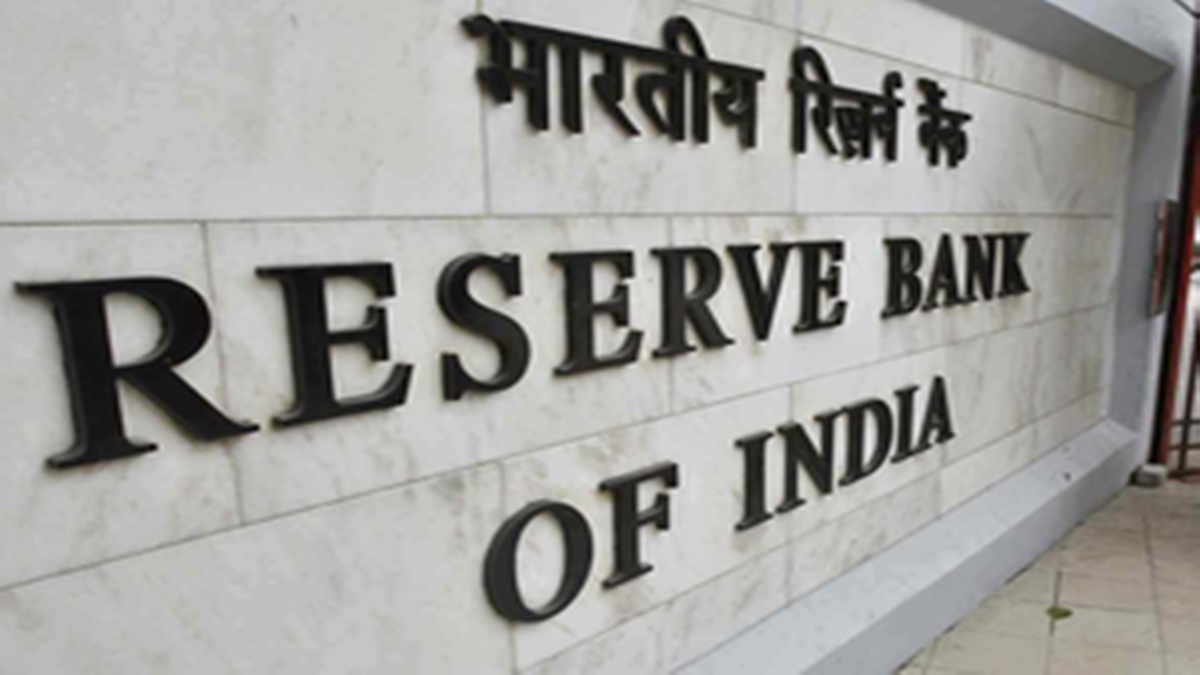
- 02 Aug 2025
In News:
The Reserve Bank of India’s Digital Payments Index (RBI-DPI), launched in January 2021, serves as a pivotal metric to gauge the country's journey toward a digital payments ecosystem. It uses March 2018 as its base year (index = 100) and is published every six months, offering a holistic and dynamic snapshot of digital transaction adoption.
RBI-DPI Calculation: Five Key Parameters
The DPI aggregates various dimensions of digital payments adoption across five weighted components:
|
Parameter |
Weightage |
Focus |
|
Payment Enablers |
25% |
Access infrastructure—mobile/internet penetration, Aadhaar, bank accounts, fintech regulations |
|
Demand-Side Infrastructure |
10% |
Consumer-facing tools—mobile/internet banking, debit/credit cards, FASTags |
|
Supply-Side Infrastructure |
15% |
Merchant tools—PoS terminals, ATMs, QR codes, bank branches, business correspondents |
|
Payment Performance |
45% |
Transaction metrics—volume/value of digital transfers, IMPS/NEFT/UPI usage, paper clearing |
|
Consumer Centricity |
5% |
User experience—awareness, complaint resolution, fraud handling, system uptime |
Drivers Behind the Mar 2025 Jump
As of March 2025, RBI-DPI stood at 493.22, up from 465.33 in September 2024—a year-on-year rise of 10.7%. The key drivers include:
- Supply-side Infrastructure Improvements: Wider merchant adoption of PoS, QR codes, and enhanced banking outreach.
- Payment Performance Surge: Rapid uptake of UPI, IMPS, and other platforms.
- Policy & Technology Boosters: Initiatives such as Digital India, increasing smartphone penetration, and fintech innovation have fueled demand.
Significance for Digital India
- Digital Economy Tracking: DPI is a quantitative barometer of India’s shift to a digital-first economy—enabling policymakers to monitor progress and identify gaps in access or infrastructure.
- Financial Inclusion & Transparency: Growth in DPI indicates deeper penetration of digital finance into rural and marginalized areas, helping combat cash reliance and promote inclusion.
- Policy Formulation & Monetary Insights: Metrics under Payment Performance bolster the RBI’s real-time understanding of transactional trends, aiding monetary policy and regulatory interventions.
- Enhancing Global Fintech Standing: A rising DPI strengthens India’s position as a global digital finance hub, enhancing credibility and attracting investment.
Challenges & Recommendations Ahead
- Digital Divide: Rural areas still lack adequate connectivity and awareness to fully utilize digital tools.
- Cybersecurity & Fraud: As transactions rise, so do risks. Issues like fraud, system downtime, and grievance redressal remain priorities.
- Tech Standardization: Ensuring interoperability and unified standards across platforms is essential.
Schengen Visa Cascade Regime
- 02 Aug 2025
In News:
Since 18 April 2024, the European Commission implemented a preferential “cascade” regime under the revised Schengen Visa Code (2020 reform), offering long-term, multiple-entry Schengen visas to Indian nationals with a clean travel history. Originally effective for India, Turkey, and Indonesia, this regime could expand to other countries based on diplomatic and readmission cooperation.
What Is the Schengen Area & Visa Basics
- The Schengen Area comprises 29 countries, including most EU members and four EFTA nations—allowing passport-free movement.
- A Schengen (short-stay) visa permits up to 90 days within any 180-day period. It is purpose-flexible (tourism, business, visiting family, etc.) but does not confer work rights.
The Cascade Regime – A Tiered System
Tier-Based Progression
The regime introduces a pyramid-like progression based on prior visa use:
|
Tier |
Requirement |
Visa Validity |
|
Entry-level |
First-time or minimal travel history |
Short-term, single-entry (probationary) |
|
Tier 1 |
Used three Schengen visas in the past 2 years |
1-year multiple-entry |
|
Tier 2 |
Held and lawfully used a 1-year multiple-entry visa in the past 2 years |
2-year multiple-entry |
|
Tier 3* |
Used a 2-year multiple-entry visa in the past 3 years |
5-year multiple-entry |
*Availability of the 5-year visa depends on passport validity.
Underlying Rule
Mexico’s 90/180 rule still applies: holders can stay only up to 90 days within any rolling 180-day period.
What's Special for Indian Nationals
- The cascade regime for Indians is more favorable than the general rule (which typically demands three prior visas within 2 years for progression). Indians now qualify for a 2-year visa with just two prior visas within 3 years, thanks to a special provision under Article 24(2c) of Regulation (EC) No 810/2009.
- The visa must not exceed passport validity—if the passport expires earlier, the visa has to be correspondingly shorter.
- The policy is discretionary—granting long-term visas (especially 5-year ones) depends on the visa officer’s judgement, even if eligibility criteria are technically met.
Strategic and Policy Significance
- People-to-people diplomacy: The cascade visa fosters cultural, business, and academic exchange, aligning with the EU's emphasis on soft power and deepening ties with India.
- Bilateral alignment: Reflects the EU-India Common Agenda on Migration and Mobility, and dovetails with negotiations around the India–EU Free Trade Agreement (FTA).
- Administrative efficiency: Long-term visas reduce repeat applications—beneficial for both visa applicants and consular resources.
- Reciprocity and expansion: Initially for India, Turkey, and Indonesia; the regime may expand to more countries based on cooperation levels.
SIMBEX-25
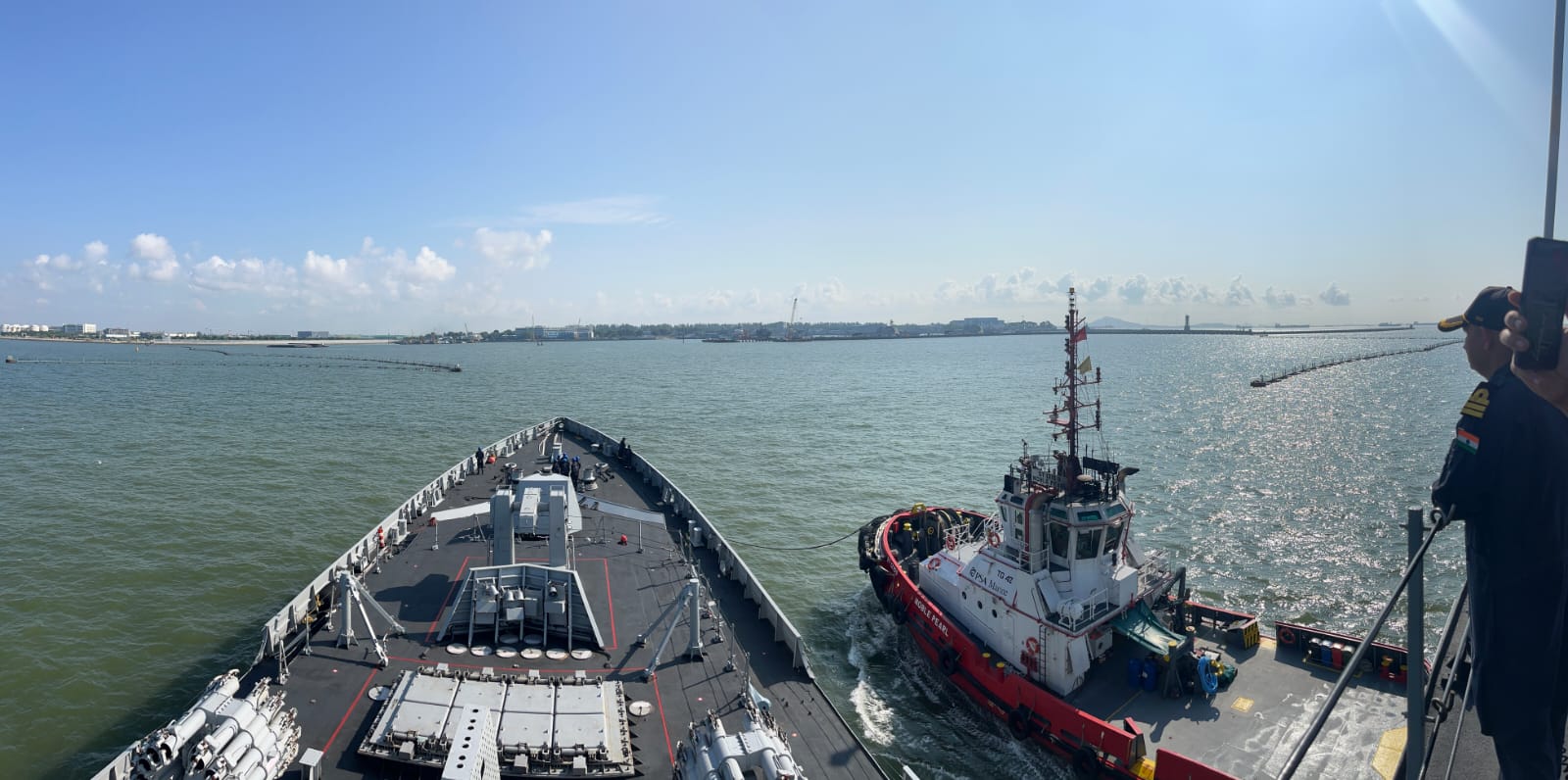
- 01 Aug 2025
In News:
- The 32nd edition of SIMBEX—India’s longest continuously conducted maritime bilateral exercise—was held from 28 July to 1 August 2025, hosted by Singapore. It included a Harbour Phase at Changi Naval Base and a Sea Phase in the southern South China Sea.
- Indian participation: INS Satpura, alongside INS Delhi, INS Kiltan, and the support vessel INS Shakti.
- Singapore Navy elements: RSN Vigilance and RSN Supreme, supported by MV Mentor and aerial units—S-70B Seahawk, Fokker-50 aircraft, and F-15SG fighters.
Objectives & Activities
Harbour Phase
- Featured Subject Matter Expert Exchanges (SMEEs), professional presentations, and strategic interactions.
- Conducted deck familiarisation visits aboard respective ships to foster doctrinal alignment
Sea Phase
- Encompassed advanced drill sequences, including:
- Air defence exercises, cross-deck helicopter operations
- Precision targeting, complex manoeuvres, and VBSS operations (Visit, Board, Search, and Seizure)
- Concluded with a ceremonial sail-past, symbolising professionalism and unity.
Geopolitical Landscape
- Strategic Reach: Deployment of Indian vessels to Philippines and Vietnam — alongside participation in SIMBEX—demonstrates India’s extended operational posture in Southeast Asia amidst regional tensions, notably with China’s maritime assertiveness.
- Broader Continuity: The Indian Navy, operating via the Andaman and Nicobar Command, employs SIMBEX as part of a broader matrix of maritime outreach in the region, including CORPAT and MILAN exercises
Sawalkote Hydroelectric Project
- 01 Aug 2025
In News:
In a strategic shift, India has floated international tenders for constructing the long-stalled Sawalkote Hydroelectric Project (1,856 MW) on the Chenab River in Jammu & Kashmir, leveraging the fact that the Indus Waters Treaty (IWT) with Pakistan is currently in abeyance. This development marks a significant turn in India’s water diplomacy and infrastructure planning.
Background & Project Details
- Location & Nature: Sawalkote is a run-of-river hydropower project near Sidhu village in Ramban district, J&K.
- Conception & Delay: Originally conceived in the 1980s, handed to NHPC in 1985, then returned to JKSPDC in 1997. Despite Rs 430 crore spent on enabling infrastructure, the project remained unstarted until a 2021 MoU revived it under an BOOT (Build-Own-Operate-Transfer) model.
- Tender Process: In July 2025, NHPC invited international bids (design, planning, engineering) with bid submissions due by September 10, 2025.
- Scale & Costs: Estimated cost stands at Rs 22,704.8 crore, set to be executed in two phases.
- Environmental Clearances: Forest Advisory Committee granted in-principle approval for diversion of 847 hectares of forest land.
Indus Waters Treaty (IWT) & Its Suspension
- Treaty Overview: Signed in 1960 (brokered by the World Bank), IWT allocates the eastern rivers (Ravi, Beas, Sutlej) to India, and the western rivers (Indus, Chenab, Jhelum) to Pakistan. India retains limited non-consumptive usage rights for hydro-power on these western rivers.
- First Suspension: On 23 April 2025, following a terrorist attack in Pahalgam, India suspended the IWT, citing national security and the treaty’s exploitation by Pakistan for cross-border terrorism.
- Consequences: India ceased hydrological data sharing, blocked Pakistani access to project visits, and released annual joint-status reporting—effectively halting treaty obligations.
- Strategic Intent: This pause grants India freedom to launch projects like Sawalkote without Pakistan’s prior objections or IWT constraints.
Geopolitical Tensions & Ramifications
- Long-term Impact on Pakistan: The Indus system sustains ~80% of Pakistan’s agriculture and electricity. Disruption could severely undermine food security, hydropower production, and urban water supply.
- Symbolism of a Rift: The treaty had survived wars and conflicts. Its suspension is viewed as an overt break in regional cooperative norms, with potential for conflict escalation.
- Legal & Diplomatic Fallout: Pakistan views reduced water flows as “act of war”; it is exploring legal avenues and appealing for treaty revival.
- India’s Firm Stance: PM Modi has labeled the treaty “unjust,” declared “blood and water cannot flow together,” further hardening India's negotiating posture.
Strategic Evaluation
- Violation or Tactical Move? While the IWT allows limited usage by India, its suspension indicates a focus on infrastructure autonomy over the western river system.
- Regional Domino Effects: With rising global water disputes, actions like this may set precedent in viewing water as geopolitical leverage.
- Environmental & Social Risks: Dam construction and forest diversion raise ecological concerns; plus, local displacement and compensation need careful handling.
Skill Impact Bond (SIB)
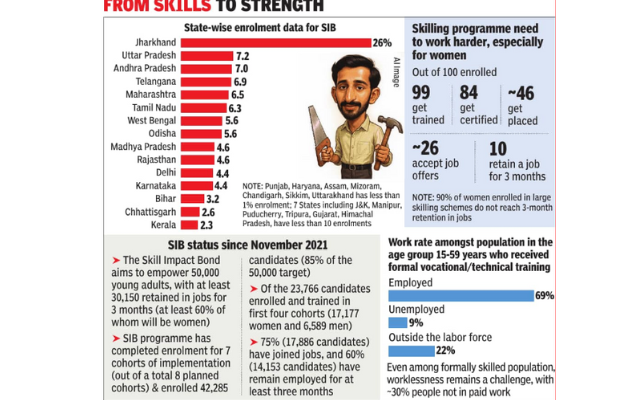
- 01 Aug 2025
In News:
- India is at the cusp of a demographic transition, with a young workforce expected to drive its goal of becoming a $30 trillion economy by 2047.
- Yet, only ~4% of India’s workforce is formally skilled, and nearly 30% of trained individuals remain unemployed. Traditional skilling schemes have struggled, especially with job retention.
- Against this backdrop, Skill Impact Bond (SIB), launched in 2021, marks a paradigm shift in India’s skilling ecosystem by linking financing to actual outcomes.
What is the Skill Impact Bond (SIB)?
- Launched: November 2021.
- Implementing Agency: National Skill Development Corporation (NSDC) under Ministry of Skill Development & Entrepreneurship.
- Partners: British Asian Trust, Children’s Investment Fund Foundation (CIFF), HSBC India, JSW Foundation, Dubai Cares.
- Target: Train 50,000 youth (60% women), ensure sustained employment.
It is India’s first development impact bond focused on employment, not just certification.
How Does SIB Work?
- Risk Investors (Private/Philanthropic): Provide upfront funds to service providers (training institutes).
- Service Providers: Deliver skill training, placement support, and post-placement mentoring.
- Outcome Funders (Govt/Donors): Repay investors if measurable outcomes are achieved (job placement + retention).
- Third-Party Evaluator: Verifies outcomes.
Key Distinction: Funding is tied to placement and retention, not mere enrolment/certification.
Progress So Far
- 23,700 youth trained across 13 sectors & 30 job roles.
- 72% women participation – one of the highest in any skilling programme.
- 75% placed in jobs, and 60% retained beyond 3 months, exceeding national averages (<10% under older schemes).
- Jharkhand, UP, Delhi are leading states in enrolment.
Significance
- Women-led Growth:
- 72% women trainees; many first-generation formal workers (tribal, rural, conservative households).
- Skilling gives women not just jobs but also agency, confidence, and identity.
- Outcome-Based Financing:
- Ensures accountability of training providers.
- Attracts private/philanthropic capital into public welfare.
- Addresses Retention Challenge:
- Traditional skilling: 84% complete training, but <10% stay in jobs beyond 3 months.
- SIB model pushes for long-term impact.
- Replicable Model:
- Can be scaled to health, education, social welfare.
- Example: Project AMBER (apprenticeship-based skilling) also uses this financing.
Challenges Ahead
- Scale vs Depth: Training 50,000 is significant, but India needs millions of skilled youth annually.
- Social Barriers: Women face mobility, safety, and cultural challenges in sustaining employment.
- Monitoring & Evaluation: Requires robust third-party systems to measure outcomes fairly.
- Private Participation: Sustaining investor confidence demands continuous success stories.
Way Forward
- Expand outcome-based financing to more sectors.
- Strengthen ecosystem for women (hostels, childcare, safe mobility).
- Continuous mentoring & alumni networks to ensure retention.
- Use digital platforms for scalable skilling and tracking.
Barbados Threadsnake (Tetracheilostoma carlae)

- 01 Aug 2025
In News:
The Barbados threadsnake, long considered lost to science, has made a startling comeback. This diminutive reptile—no longer than a coin—was rediscovered in Barbados in March 2025, nearly two decades after its last documented sighting. Its reappearance has reignited global interest in its conservation and the fragile ecosystems it inhabits.
Key Attributes & Taxonomy
- Scientific Classification: Tetracheilostoma carlae, family Leptotyphlopida.
- Size & Weight: Adults reach approximately 9–10 cm (3–4 in) in length and weigh ~0.6 g (~0.02 oz)—making it the world’s smallest known snake
- Physical Traits: Extremely slender—about as thick as a spaghetti noodle. Distinguished by pale orange dorsal stripes and a small scale on the snout
- Vision & Behavior: A blind, fossorial snake that burrows underground, especially hiding under rocks during the day.
- Diet: Feeds on termite and ant larvae—its petite jaws prevent it from consuming larger prey.
- Reproduction: Oviparous, laying only one large egg at a time, with hatchlings already about half the size of adults.
Rediscovery: A Significant Scientific Moment
- Context: The species had not been observed since 2006, and earlier specimens were often misidentified in museum collections.
- 2025 Rediscovery: During a March ecological survey in central Barbados by the Ministry of Environment and Re:wild, the snake was found under a rock near a jack-in-the-box tree. It was confirmed after microscopic and morphological assessment at the University of the West Indies.
- Reactions: This turn of events is hailed as a conservation triumph and a poignant reminder of Barbados’s biodiversity despite its heavily altered landscape.
Conservation Context & Implications
- Habitat Loss: Over 98% of Barbados’s primary forests have been cleared, leaving threadsnake habitats limited to a few square kilometers of secondary forests, particularly in the Scotland District.
- Threats: Loss of habitat and competition from the invasive Brahminy blind snake (Ramphotyphlops braminus), which reproduces asexually and may outcompete the threadsnake.
- Conservation Action: The rediscovery falls under the broader Conserving Barbados’ Endemic Reptiles (CBER) project. Future plans focus on mapping its range, safeguarding habitats, and preserving biodiversity as part of Barbados's compliance with the Kunming-Montreal Global Biodiversity Framework.
Dorjilung Hydropower Project
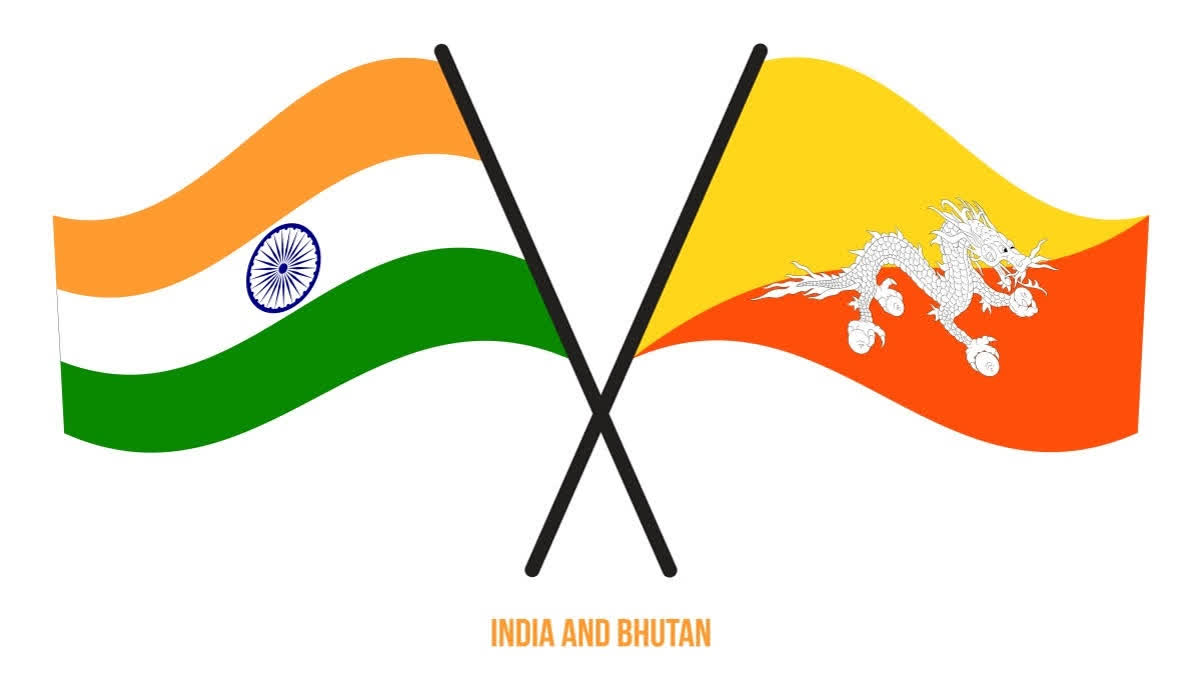
- 01 Aug 2025
In News:
India and Bhutan share one of the most successful models of hydropower cooperation in South Asia. The launch of the 1125 MW Dorjilung Hydropower Project in Bhutan, with Tata Power’s equity participation alongside Bhutan’s Druk Green Power Corporation (DGPC), marks a turning point in cross-border energy diplomacy. Unlike earlier projects dominated by Indian government financing, Dorjilung reflects a shift towards Public–Private Partnership (PPP), multilateral funding, and private sector involvement.
Key Features of the Project
- Type: Run-of-the-river scheme on the Kurichhu River (tributary of Drangmechhu, flows into India).
- Location: Mongar and Lhuentse districts, eastern Bhutan.
- Technical Specs:
- Dam height: ~139.5 m (concrete-gravity).
- Headrace tunnel: 15 km.
- Powerhouse: 6 Francis turbines.
- Annual generation: ~4.5 TWh.
- Cost: USD 1.7 billion (~?150 billion).
- Funding: World Bank.
- Equity Structure: DGPC (60%) + Tata Power (40%).
- Timeline: Commissioning expected by 2032.
India–Bhutan Energy Ties
- Existing Cooperation:
- Governed by the 2006 Bilateral Agreement on Hydropower Cooperation (protocol revised 2009).
- 4 operational projects supplying power to India: Chhukha (336 MW), Kurichhu (60 MW), Tala (1020 MW), Mangdechhu (720 MW).
- Punatsangchhu I (1200 MW) and Punatsangchhu II (1020 MW) under construction.
- Economic Importance for Bhutan:
- Hydropower exports = 40% of govt revenue and 25% of GDP.
- India buys surplus electricity, ensuring stable market access.
- India’s Strategic Interest:
- Ensures clean energy imports.
- Strengthens regional energy security.
- Counters Chinese presence in the Himalayan hydropower sector.
What Makes Dorjilung Different?
- PPP & Private Sector Role: First large-scale project with an Indian private company (Tata Power) holding major equity.
- Diversified Financing: World Bank funding reduces Bhutan’s dependence on Indian grants and credit lines.
- B2B Model: Moves from a government-to-government (G2G) model to business-to-business (B2B), granting Bhutan greater autonomy and bargaining parity.
- Integrated Renewable Plan: Tata Power–DGPC partnership envisions 5000 MW clean energy capacity, including:
- Dorjilung (1125 MW)
- Gongri (740 MW)
- Jeri Pumped Storage (1800 MW)
- Chamkharchhu IV (364 MW)
- Solar projects (500 MW).
Strategic & Geopolitical Significance
- For Bhutan:
- Reduces financial vulnerability by avoiding overdependence on Indian government aid.
- Attracts global institutions (World Bank), raising international credibility.
- Boosts local development in eastern districts (infrastructure, jobs).
- For India:
- Enhances energy security via long-term clean energy imports.
- Strengthens economic diplomacy with a trusted neighbour.
- Counters China’s Belt and Road Initiative (BRI) push in Himalayan hydropower (e.g., Nepal’s tilt towards Chinese funding).
- Supports Paris Agreement & renewable targets.
- For the Region:
- Creates scope for regional energy grids under BIMSTEC and BBIN (Bangladesh, Bhutan, India, Nepal).
- Encourages private-sector led cross-border energy trade.
Challenges Ahead
- Delayed Timelines: Past Bhutanese projects (e.g., Punatsangchhu I & II) suffered huge delays and cost overruns.
- Debt Burden: Large projects raise Bhutan’s external debt, though hydropower revenue offsets this risk.
- Environmental Concerns: Dam construction in fragile Himalayan ecosystems risks landslides, habitat loss, and displacement.
- Domestic Politics: Growing debate within Bhutan on overdependence on India; balancing autonomy with partnership is key.
- Regional Rivalries: India’s refusal to import power from Chinese-funded projects in Nepal shows how geopolitics can complicate energy trade.
Way Forward
- Diversify Financing: Blend of multilateral, private, and bilateral sources to reduce dependency risks.
- Strengthen Grid Connectivity: Expand India–Bhutan–Bangladesh power corridors.
- Sustainable Practices: Ensure climate-resilient dam design, environmental safeguards, and local community participation.
- Expand Solar–Hydro Synergy: Hybrid models (hydropower + solar) to ensure round-the-clock renewable supply.
- Institutional Mechanisms: Strengthen the India–Bhutan Joint Group on Hydropower Projects for dispute resolution and faster approvals.
First-Ever Grassland Bird Census in Kaziranga National Park
- 31 Jul 2025
In News:
The first dedicated Grassland Bird Census was conducted in Kaziranga National Park, Assam, marking a significant step in avian biodiversity monitoring in India. The initiative was widely acknowledged, including by Prime Minister Narendra Modi in his Mann Ki Baat broadcast, for its innovative use of Artificial Intelligence (AI) and acoustic monitoring.
Objective and Significance
- Purpose: To systematically monitor the population, breeding patterns, and habitat health of grassland-dwelling bird species, many of which are rare or threatened.
- Conservation Value: Grassland birds serve as ecological indicators of habitat quality, akin to how BMI reflects human health.
- Highlight Species:
- Documented 43 bird species
- Included 1 Critically Endangered, 2 Endangered, and 6 Vulnerable species (IUCN Red List)
- Notably, over 85 nests of the endangered Finn’s Weaver, endemic to the Brahmaputra floodplains, were discovered.
Methodology & Technological Innovations
- Conducted By: Joint effort of forest officials, Kaziranga National Park authorities, conservationists, and researchers including INSPIRE fellow Chiranjib Bora.
- Sites Covered: 185 grassland locations across the national park.
- Tools Used:
- Passive Acoustic Monitoring: Audio recorders placed atop trees to capture bird calls during the breeding season.
- AI Integration:
- BirdNET Software used to automatically identify bird species by analyzing vocalizations.
- Spectrograms enabled visual analysis of sound frequencies for accurate classification.
Key Innovations and Impact
- First of its Kind: India’s first census focused exclusively on grassland bird species, often overlooked in standard bird surveys.
- Non-Intrusive Monitoring: AI-powered audio analysis allowed species identification without disturbing natural behavior.
- Awareness & Biodiversity Education: The census is a powerful example of how technology and sensitivity can together enhance biodiversity understanding and conservation awareness.
Setubandha Scholar Scheme
- 31 Jul 2025
In News:
The Setubandha Scholar Scheme (also referred to as Setubandha Vidwan Yojana) is a pioneering national initiative launched by the Ministry of Education to integrate scholars from traditional gurukuls into India's mainstream research ecosystem—especially at premier institutions like IITs.
Key Highlights:
- Objective: To formally recognise traditional learning and connect Indian Knowledge Systems (IKS) with modern scientific disciplines.
- Implementing Agency: Indian Knowledge System (IKS) division under the Central Sanskrit University (CSU).
- Eligibility: Minimum 5 years of rigorous study in a recognised gurukul and proven expertise in Shastras or traditional knowledge. No formal academic degree is required.
- Age Limit: Maximum 32 years.
Fellowships & Research Grants:
|
Category |
Fellowship (per month) |
Annual Research Grant |
Equivalent Academic Level |
|
Category 1 |
?40,000 |
?1,00,000 |
Postgraduate (Master’s) |
|
Category 2 |
?65,000 |
?2,00,000 |
Doctoral (PhD) |
- Research Domains (18 Fields): Ayurveda, health sciences, mathematics, astronomy, physics, grammar, strategic studies, political theory, cognitive science, architecture, performing arts, and more.
- Notable traditional categories include Anvikshiki Vidya (philosophy), Ganit-Bhaut-Jyotish Vidya (mathematics, physics, astronomy), and Bhaishajya-Arogya Vidya (health sciences).
Policy Context: NEP 2020 and Beyond
The scheme is a direct outcome of reforms envisioned under the National Education Policy (NEP) 2020, which emphasizes integrating traditional Indian knowledge systems with modern education, promoting multidisciplinary learning, and creating a flexible, inclusive research environment.
NEP-Driven Initiatives Linked to Setubandha:
- Nipun Bharat: Improved foundational literacy and numeracy by Class 2.
- Vidya Pravesh & Balvatikas: Early childhood education integration.
- Bharatiya Bhasha Pustak Yojana: Democratizing Indian language access.
- National Digital Depository for IKS: Repository of classical knowledge.
- PM Shri Schools: Model schools aligned with NEP's vision.
- Academic Bank of Credits (ABC) and Multiple Entry-Exit options.
- Anusandhan NRF & PMRF 2.0: Boosting research funding and fellowships.
- Global Outreach: Foreign universities (e.g., Deakin, Wollongong) setting up campuses in India.
Wider Impact and Significance:
- Institutional Recognition: For the first time, gurukul-trained scholars can pursue advanced research alongside IIT peers.
- Inclusivity in Education: Enables non-formal scholars to access elite academic spaces.
- Global Relevance: As interest grows in Ayurveda, Yoga, Sanskrit linguistics, and indigenous governance, India is positioning itself as a global knowledge hub.
- Empowerment of Marginalised Groups: Over 7.12 lakh girls in Kasturba Gandhi Balika Vidyalayas, and hostel schemes for PVTGs reflect NEP’s inclusive approach.
CRIB Blood Group

- 31 Jul 2025
In News:
- In a landmark discovery in transfusion science, researchers from India and the UK have identified a new and ultra-rare human blood group named CRIB, with the first case detected at the Rotary Bangalore TTK Blood Centre.
- The CRIB group adds to India’s growing contribution to rare blood immunogenetics and has been officially recognised by the International Society of Blood Transfusion (ISBT) and the International Blood Group Reference Laboratory (IBGRL), UK.
What is the CRIB Blood Group?
- CRIB stands for Cromer India Bengaluru and also symbolically refers to its importance in newborn and fetal medicine.
- It is a new antigen within the Cromer blood group system, which is linked to the Decay-Accelerating Factor (DAF) protein on red blood cells.
- CRIB belongs to the broader INRA (Indian Rare Antigen) blood group system, officially recognised in 2022 by the ISBT.
Discovery and Identification:
- Detected in a 38-year-old South Indian woman undergoing cardiac surgery in Kolar, Karnataka.
- Her blood was pan-reactive, reacting with all samples including O+ blood.
- No match was found even among 20 family members, leading to further analysis.
- After 10 months of genetic study at IBGRL, UK, a novel antigen was confirmed and designated as CRIB.
Scientific and Medical Significance:
- Rare Antigen Profile: Individuals with CRIB blood type lack a high-prevalence antigen, making compatible transfusions highly complex.
- Hemolytic Disease Risk: The CRIB antigen is especially relevant in Hemolytic Disease of the Fetus and Newborn (HDFN), where maternal antibodies attack fetal red blood cells.
- Global First: It is the first discovery of its kind globally, expanding the total number of known human blood group systems.
Implications for India and the World:
- Transfusion Protocols: Requires specialised matching and CRIB-negative donor identification, necessitating rare donor registries.
- Prenatal Care: Early screening could prevent complications in pregnancies involving blood group incompatibilities.
- Healthcare Infrastructure: Highlights the need for investment in genetic screening, rare blood banks, and pan-India awareness among healthcare professionals.
- Research Opportunities: Opens new areas of study in genomics, population diversity, and immune response in transfusions.
Next Steps:
- Development of CRIB-specific antibody panels and diagnostic tests.
- Integration into global and national blood group databases.
- Promotion of international collaboration in transfusion science and rare donor management systems.
Mera Gaon Mera Dharohar Programme

- 31 Jul 2025
In News:
The Mera Gaon Meri Dharohar (MGMD) initiative is a nationwide cultural mapping project launched by the Ministry of Culture on 27th July 2023 as part of the Azadi Ka Amrit Mahotsav. It operates under the National Mission on Cultural Mapping (NMCM) and is implemented by the Indira Gandhi National Centre for the Arts (IGNCA).
Key Highlights:
- Objective: To digitally document and preserve the intangible cultural heritage of all 6.5 lakh villages across India through a comprehensive virtual cultural portfolio.
- Current Status (as of 2025):
- Over 4.7 lakh villages have been culturally mapped.
- The data is accessible on the MGMD web portal.
- Thematic Categories: Each village is documented based on one or more of seven cultural themes:
- Arts and Crafts Villages
- Ecologically Oriented Villages
- Scholastic Villages (linked to texts and scriptural traditions)
- Epic Villages (associated with Ramayana, Mahabharata, Puranas, and oral epics)
- Historical Villages (linked to local or national history)
- Architectural Heritage Villages
- Other culturally significant villages (e.g., fishing, horticulture, pastoral communities)
Significance:
- Preservation of Heritage: Helps safeguard India’s diverse village-level traditions and practices.
- Cultural Inclusion: Recognizes lesser-known cultural narratives and identities.
- Rural Development: Encourages economic and artistic growth through cultural awareness.
- Digital Cultural Infrastructure: Enables access to cultural data via online platforms.
About National Mission on Cultural Mapping (NMCM)
Launched in 2017, the NMCM is a flagship initiative of the Ministry of Culture aimed at documenting and promoting India’s cultural diversity with a focus on grassroots-level heritage.
Key Components:
- Mera Gaon Meri Dharohar (MGMD) – Mapping of village-level cultural assets.
- Sanskritik Pratibha Khoj – Campaigns to discover artistic talent and promote folk and tribal arts.
- National Cultural Workplace (NCWP) – A digital platform and mobile app to create databases of artists, art forms, and cultural services.
This initiative strengthens India’s commitment to heritage conservation, digital documentation, and self-reliant cultural development, in line with Atmanirbhar Bharat.
Exercise Divya Drishti
- 31 Jul 2025
In News:
In July 2025, the Indian Army conducted Exercise Divya Drishti in East Sikkim, showcasing next-generation warfare technologies under high-altitude conditions.
Organised by the Trishakti Corps, the exercise focused on integrating Artificial Intelligence (AI) with battlefield surveillance and decision-making systems, in alignment with the Atmanirbhar Bharat initiative and the Army’s Decade of Transformation roadmap.
Key Features:
- AI-Enabled Battlefield Awareness: The Army deployed AI-integrated sensors capable of real-time surveillance, terrain mapping, and threat detection.
- Sensor-to-Shooter Linkage: Real-time data was transmitted from UAVs, drones, and ground-based sensors to command centres and firepower units, ensuring rapid response capability.
- UAV-Drone-Ground Synergy: Unmanned Aerial Vehicles (UAVs) and drones operated in coordination with ground platforms to simulate operational combat scenarios.
- Secured Communication Networks: Robust digital communication systems enabled seamless and secure data sharing across units.
- High-Altitude Readiness: The technologies were tested in the Himalayan terrain to assess their effectiveness in extreme operational environments.
Strategic Significance:
- Enhanced Situational Awareness: The exercise aimed to improve the Army’s capacity to observe, interpret, and act swiftly on the modern battlefield.
- Faster Decision-Making: AI integration minimizes command delays, improving response speed and operational precision.
- Indigenisation Drive: Demonstrates the Indian Army’s push for self-reliance in defence technology under Make in India.
- Future Warfare Doctrines: The insights will inform new operational strategies for multi-domain and hybrid warfare.
Operation Mahadev
- 30 Jul 2025
In News:
Indian security forces recently launched Operation Mahadev, a joint counter-terror operation near Srinagar, successfully neutralising three high-value terrorists, including Suleiman Shah, the mastermind behind the April 22 Pahalgam attack.
Key Facts about Operation Mahadev
|
Attribute |
Details |
|
Nature |
Precision anti-terror operation |
|
Launched By |
Indian Army (Para SF), CRPF, and J&K Police |
|
Command |
Strategically coordinated under the Chinar Corps |
|
Location |
Lidwas area, near Dara and Harwan, close to Dachigam National Park, Srinagar, Jammu & Kashmir |
Objectives and Outcomes
- Primary Aim: To neutralise Lashkar-e-Taiba-affiliated terrorists, specifically those involved in:
- Pahalgam attack (April 2024)
- Sonamarg Tunnel attack
- Notable Neutralised Terrorists:
- Suleiman Shah (main planner of Pahalgam attack)
- Two other Pakistan-trained terrorists, including a former Pakistani Army personnel
Strategic Significance
- Major blow to cross-border terrorism networks operating in Kashmir
- Reinforces India’s anti-terror posture, especially amidst the ongoing Operation Sindoor policy debate
- Enhances morale of security forces engaged in continuous counter-insurgency in the region
Paithani Sarees
- 30 Jul 2025
In News:
The Prime Minister recently highlighted the cultural and artisanal significance of Paithani sarees during the monthly ‘Mann Ki Baat’ radio programme, bringing national attention to this traditional Maharashtrian textile.
Historical Background
- Origin: Paithani sarees derive their name from Paithan, an ancient town on the banks of the Godavari River in Maharashtra.
- Antiquity: The tradition of Paithani weaving dates back over 2,000 years, with its roots in the Satavahana dynasty (2nd century BCE).
- Royal Patronage: These sarees were patronized by several royal courts, including the Satavahanas, Peshwas of Pune, Nizams of Hyderabad, and Mughal emperors.
Key Features
|
Attribute |
Description |
|
Material |
Woven using pure silk and gold/silver zari |
|
Technique |
Crafted using the tapestry weaving method, all handwoven |
|
Designs |
Intricate motifs like peacocks, parrots, lotuses, and floral vines |
|
Border & Pallu |
Known for distinctive kath (border) and padar (pallu) designs |
|
Size |
Typically six- or nine-yard sarees |
|
Cultural Significance |
Regarded as the ‘Mahavastra’ (great garment) of Maharashtra, traditionally worn by Maharashtrian brides |
Recognition and Cultural Value
- Symbol of Heritage: Paithani sarees are considered a symbol of Maharashtrian cultural identity and artisanal excellence.
- GI Tag: Granted the Geographical Indication (GI) tag in 2010, acknowledging their unique regional origin and craftsmanship.
- Artistic Value: Among the most exquisite and expensive sarees in India, valued for their aesthetic finesse and traditional techniques.
State of Food Security and Nutrition in the World (SOFI) 2025 Report
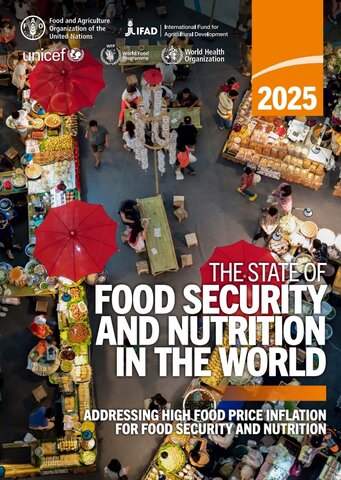
- 30 Jul 2025
In News:
Hunger affected up to 720 million people worldwide in 2024 — around 8.2 per cent of the global population, while 2.3 billion people in the world were estimated to have been moderately or severely food insecure, according to the ‘State of Food and Nutrition in the World’ (SOFI) 2025.
Key Highlights:
- Released by: Jointly published by FAO, IFAD, UNICEF, WFP, and WHO.
- Purpose:
- Annual global assessment to monitor progress on Sustainable Development Goal (SDG) 2:
- Target 2.1: End hunger and ensure access to safe, nutritious food.
- Target 2.2: End all forms of malnutrition.
Key Global Findings (2024 Data)
- Chronic Hunger:
- 720 million people (approx. 8.2% of global population) suffered from chronic hunger in 2024.
- Although lower than 8.5% (2023) and 8.7% (2022), it remains above pre-pandemic (2015) levels.
- 96 million more people are hungry now than in 2015.
- Food Insecurity:
- 2.3 billion people were moderately or severely food insecure in 2024.
- This is 335 million more than in 2019 (pre-COVID) and 683 million more than in 2015.
- Regional Distribution:
- Asia: 323 million undernourished (highest in absolute numbers).
- Africa: 307 million (highest prevalence, over 20% of population).
- Latin America & Caribbean: 34 million.
- Trends & Progress:
- Modest improvements in Southeast Asia, Southern Asia, and South America.
- Worsening hunger in parts of Africa and Western Asia due to conflict and climate stress.
Projections for 2030
- By 2030, 512 million people (6% of global population) may remain chronically undernourished.
- A decline of only 65 million since 2015, far short of the Zero Hunger target.
- 60% of these undernourished people are projected to be in Africa, with 17.6% prevalence.
India-Specific Insights
- Nutritional Affordability:
- 6% of Indians cannot afford a healthy diet despite food surplus.
- Urban areas show improvement due to post-pandemic income recovery.
- Rural areas face continued hardship due to PDS inefficiencies and price volatility.
- Child Malnutrition:
- High rates of stunting and wasting persist.
- Micronutrient deficiencies (hidden hunger) are common due to cereal-heavy diets lacking diversity.
- Policy Recommendations:
- Strengthen inclusion of millets, pulses, and fortified foods in public nutrition schemes.
- Address regional and demographic disparities through targeted interventions.
Major Drivers of Food Insecurity
- Post-COVID Aftermath: Reversed a decade of gains in global food security.
- Climate Events: Floods, droughts, and heatwaves have disrupted food systems.
- Conflicts & Wars: Ongoing wars (e.g. Ukraine) have triggered food price inflation and supply disruptions.
- Inflation:
- Since 2020, food price inflation has outpaced general inflation globally.
- Disproportionately affects low-income and vulnerable populations.
SOFI 2025: Recommendations
- Protect vulnerable populations via targeted fiscal support.
- Align macroeconomic policies to stabilize food markets.
- Invest in resilient agrifood systems and nutrition-sensitive agriculture.
- Strengthen food and nutrition data systems for informed policymaking.
- Promote dietary diversity and nutrition education.
SDG Context & Governance
- SDG 2 (Zero Hunger) is among the 17 UN Sustainable Development Goals adopted in 2015.
- These are non-binding, but serve as guiding principles for national policy and international cooperation.
- The SOFI report tracks progress annually against Targets 2.1 & 2.2.
- With only 5 years left to 2030, the current pace is inadequate for achieving global food and nutrition targets.
Gavri Festival
- 30 Jul 2025
In News:
Gavri is a unique 40-day ritualistic folk festival celebrated annually by the Bhil tribal community of the Mewar region in Rajasthan. It is a vibrant blend of dance, drama, music, and oral storytelling rooted deeply in the Bhil worldview, spirituality, and socio-cultural expression.
Key Features:
- Duration: 40 days, usually observed during the Hindu months of Shravana and Bhadrapada (July to September), coinciding with the monsoon and early harvest season.
- Form: A fusion of dance, drama (khel), mime, and dialogues.
- Theme: Enacts mythological battles between good and evil, primarily featuring Goddess Gauri/Amba and demons such as Bhasmasur or Bhiamwal, symbolizing the triumph of good.
- Performance Spaces: Villages where the performers' married sisters and daughters reside, reinforcing familial ties and social cohesion.
- Characters: All roles, including female ones, are portrayed by male performers, due to prevailing patriarchal norms.
- Narration: A storyteller called Kutkadiya introduces each scene, enhancing audience immersion.
- Costumes & Music: Colorful attire, energetic drumming, and folk instruments create a lively, theatrical atmosphere.
Cultural and Social Significance
- Spiritual Identity: The Bhil community considers themselves descendants of Lord Shiva and Goddess Parvati, viewing Parvati (Gauri) as their divine sister. Gavri is performed to honour her and ensure the well-being of their married women.
- Oral Heritage: The festival preserves centuries-old oral traditions, possibly dating back to the 3rd or 4th century CE, with references to the era of Siddhraj Jai Singh of Gujarat.
- Carnivalesque Spirit: Gavri subverts caste and class hierarchies through humor, parody, and satire. Authority figures, kings, and even gods may be lampooned in the plays.
- Resistance & Nature Worship: Performances like Badliya Hindwa and Bhilurana reflect themes of nature worship, tribal resistance to invaders (Mughals, British), and warnings against ecological destruction.
- Gender Fluidity: Though patriarchal in nature, the performance of female roles by men adds a layer of gender expression and cultural fluidity during the ritual.
Bhil Tribe: An Overview
- One of India's largest Adivasi groups, found mainly in Rajasthan, Gujarat, Madhya Pradesh, and Maharashtra.
- Speak the Bhili language and practice a syncretic faith combining animism with Hindu mythology.
- Their cultural identity is closely tied to forests, nature, and community-based rituals like Gavri.
Golden Jackal
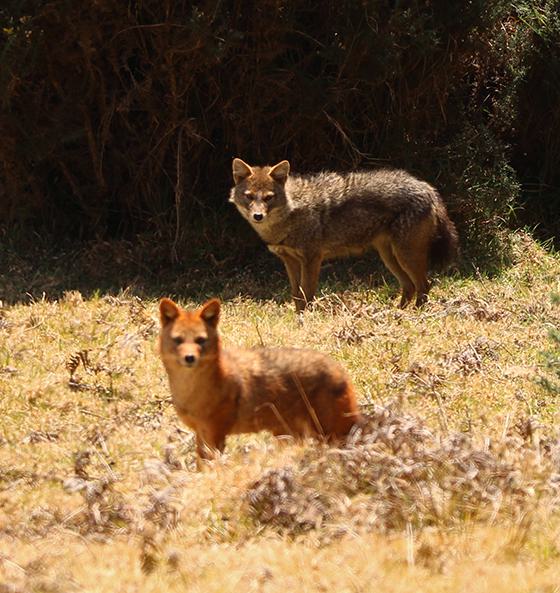
- 30 Jul 2025
In News:
A recent citizen science study conducted by the Aranyakam Nature Foundation estimates that Kerala is home to approximately 20,000 to 30,000 golden jackals (Canis aureus naria), highlighting the species' wide distribution and adaptability across the state’s diverse landscapes.
Key Ecological Facts
- Scientific Name: Canis aureus
- Common Names: Golden Jackal, Common Jackal
- Physical Appearance: Medium-sized canid, smaller than a wolf and larger than a fox; coat ranges from golden to pale brown, varying seasonally.
- Behaviour: Primarily nocturnal in human-dominated areas; lives in monogamous pairs, often uses burrows or rock crevices for shelter.
- Diet: Omnivorous; consumes small mammals, birds, fish, insects, hares, fruits, and is known to scavenge near human settlements.
Habitat and Distribution
- Found in South, Southeast, and Central Asia, extending into Southeastern Europe and North-East Africa.
- In India, widespread from the Himalayan foothills to the Western Ghats, including Kerala, Maharashtra, Rajasthan, and Haryana.
- Preferred Habitats: Open lowland regions, especially below 200m elevation. In Kerala:
- Coconut groves (24%)
- Rural settlements (10%)
- Urban areas (5.6%)
- Rare in protected forest areas (only 2% of sightings)
Key Findings from Kerala Study
- Over 5,000 sightings were recorded across 874 villages, involving 2,200+ participants.
- High adaptability to human-modified landscapes such as peri-urban zones and coastal belts.
- Ecological Concerns:
- Rising cases of poultry predation
- Risk of rabies transmission
- Increasing dependence on organic waste, especially near coastlines
- Threat of hybridisation with stray dogs, posing genetic risks
Conservation Status
- IUCN Red List: Least Concern
- CITES: Appendix III
- Wildlife Protection Act, 1972 (India): Schedule I (highest protection under Indian law)
Veer Parivar Sahayata Yojana
- 29 Jul 2025
In News:
The National Legal Services Authority (NALSA), in a significant step toward safeguarding the legal rights of India’s uniformed forces, launched the Veer Parivar Sahayata Yojana during the North Zone Regional Conference in Srinagar. Themed “Reaffirming the Constitutional Vision of Justice for Defence Personnel and Tribals,” the event spotlighted the urgent need to institutionalize accessible legal assistance for military personnel and their families.
Rationale and Objectives
- Defence and paramilitary personnel frequently serve in remote, conflict-prone, or high-risk environments, which limits their ability to attend to civilian legal matters. Be it land disputes, family conflicts, service-related claims, or bureaucratic issues, legal hurdles can deeply affect their lives. The scheme acknowledges that a soldier stationed on the border cannot readily leave his post to handle legal proceedings back home.
- The Veer Parivar Sahayata Yojana is designed to bridge this critical gap by providing free, competent, and timely legal aid to serving personnel, veterans, and their families.
Key Features of the Scheme
- Joint Collaboration: The initiative is a joint effort between NALSA, the Kendriya Sainik Board (KSB), Rajya Sainik Boards (RSBs), and Zilla Sainik Boards (ZSBs) under the Department of Ex-Servicemen Welfare, Ministry of Defence.
- Legal Clinics Across Sainik Boards: Legal Services Clinics will be established at the district, state, and central levels of the Sainik Boards across India. These will function as the first point of contact for defence families seeking legal assistance.
- Trained Legal Volunteers: The initiative actively involves panel lawyers and trained paralegal volunteers, including ex-servicemen and defence family members, to offer legal services and counselling.
- Back-end Legal Infrastructure: A robust administrative mechanism will support the on-ground functioning of clinics and ensure prompt resolution of legal grievances.
- Coverage for Paramilitary Forces: The scheme will also extend support to paramilitary personnel from forces such as BSF, CRPF, ITBP, and others, who operate under similar hardships and isolation.
Significance and Constitutional Context
- The scheme upholds Article 39A of the Constitution, which mandates equal justice and free legal aid for all citizens. Defence personnel, who make immense sacrifices for national security, often remain underserved when it comes to civilian entitlements, rights, and dispute resolution.
- By reaffirming the constitutional commitment to access to justice, the scheme aligns with the broader goal of legal empowerment of vulnerable and marginalized communities, including those in service of the nation.
Deep Brain Stimulation (DBS)
- 29 Jul 2025
In News:
Over 1.6 lakh individuals globally have benefited from Deep Brain Stimulation (DBS)—a cutting-edge neurological procedure designed to manage complex brain disorders.
What is Deep Brain Stimulation?
DBS is a neurosurgical intervention wherein electrodes are surgically implanted into precise regions of the brain. These electrodes are connected via insulated wires to a pulse generator (similar to a pacemaker), typically placed under the skin near the collarbone.
The device delivers regulated electrical signals to targeted brain circuits. This helps modulate abnormal neural activity or restore disrupted brain function caused by neurological or psychiatric conditions.
How Does It Work?
- The implanted system sends mild, continuous electrical pulses to specific brain areas.
- These pulses help in stabilizing erratic electrical signals, which are often responsible for motor and cognitive dysfunctions.
- The stimulation does not destroy brain tissue and can be adjusted or turned off, offering reversibility unlike traditional ablative surgeries.
Clinical Applications of DBS
DBS has been widely adopted for treating movement disorders, especially when medications become ineffective:
- Parkinson’s Disease
- Essential Tremor
- Dystonia
Beyond motor disorders, DBS has received regulatory approval for use in certain psychiatric illnesses, such as: Obsessive-Compulsive Disorder (OCD)
Research is ongoing to explore its efficacy in conditions like:
- Severe Depression
- Epilepsy
Benefits of DBS
- Reversible and adjustable intervention
- Helps reduce motor symptoms such as tremors, stiffness, and rigidity
- Aims to normalize brain circuit functions at both micro (cellular) and macro (network) levels
- Offers hope in cases resistant to standard pharmacological therapies
Internal Complaints Committees

- 29 Jul 2025
In News:
The tragic case of a student’s self-immolation in Balasore, Odisha, in 2025, has brought renewed focus on the functioning of Internal Complaints Committees (ICCs) in India. The student, alleging sexual harassment by her Head of Department, had approached the college ICC, but her complaint was dismissed. Her family has alleged that the ICC was inadequately trained and biased in favor of the accused, exposing systemic flaws in India’s redressal mechanisms for workplace harassment.
This incident is a stark reminder that even a decade after the enactment of the Sexual Harassment of Women at Workplace (Prevention, Prohibition and Redressal) Act, 2013—popularly known as the POSH Act—the law’s implementation remains inconsistent and often ineffective.
Evolution of ICCs and the Legal Framework
1. Vishaka Guidelines (1997)
The foundation for workplace sexual harassment law in India was laid by the Supreme Court’s judgment in the Vishaka vs. State of Rajasthan (1997). The case stemmed from the gang-rape of Bhanwari Devi, a social worker who attempted to prevent a child marriage. The judgment led to the formulation of the Vishaka Guidelines, which:
- Defined sexual harassment at the workplace.
- Mandated Complaints Committees in institutions.
- Required these committees to be headed by a woman, have at least 50% female members, and include an external member to prevent internal bias.
However, these were non-binding guidelines and lacked statutory force.
2. POSH Act, 2013
The 2012 Nirbhaya gang-rape case spurred public demand for stronger gender-based protections, resulting in the enactment of the POSH Act, which gave legal backing to the Vishaka Guidelines. Key provisions of the POSH Act include:
- Mandatory establishment of Internal Complaints Committees (ICCs) at all workplaces with more than 10 employees.
- Creation of Local Complaints Committees (LCCs) at the district level to cover unorganized or small enterprises.
- ICCs are empowered to inquire, recommend disciplinary action, and facilitate criminal reporting when needed.
Structure and Powers of ICCs
Each ICC must have the following composition:
- Presiding Officer: A senior female employee.
- Two internal members: Preferably with legal knowledge or experience in social work.
- One external member: From an NGO or association committed to women's rights.
- At least 50% women members.
Functions and Powers:
- Can attempt conciliation if requested by the complainant.
- If not, must conduct an inquiry within 90 days.
- Can summon individuals and documents, with powers equivalent to a civil court.
- Can recommend disciplinary action to the employer if allegations are proven.
- The employer must assist the victim in pursuing a criminal complaint if desired.
- All proceedings and identities must be kept confidential.
Challenges in Implementation
Despite a clear legal mandate, the real-world functioning of ICCs has been fraught with systemic issues:
1. Poor Coverage
- Many institutions, especially in the private and informal sectors, have not constituted ICCs.
- Local Committees, intended to help informal workers, are either underreported or ineffective.
2. Inadequate Training and Bias
- ICC members often lack legal training or understanding of trauma-sensitive inquiry.
- As seen in the Balasore case, committees may favor senior male colleagues, reinforcing institutional power hierarchies.
- The absence of external accountability leads to compromised decisions.
3. Lack of Monitoring and Enforcement
- The Ministry of Women and Child Development is the nodal agency for the Act.
- But enforcement responsibility often lies with Labour and Industry Ministries, leading to fragmented oversight.
- The Supreme Court, in a 2024 review, described enforcement as “disquieting”, with serious lapses and poor record-keeping.
4. Breaches of Confidentiality
- There have been reports of identities being leaked, and complainants being stigmatized or retaliated against, violating the core principles of the Act.
Strengthening the POSH Mechanism
To ensure that the POSH Act fulfills its mandate, the following steps are critical:
- Universal Coverage and Registration:
- Mandate public disclosure of ICCs in all eligible institutions.
- Strengthen district monitoring mechanisms for both ICCs and LCCs.
- Capacity Building: Introduce mandatory training for ICC members on legal procedures, gender sensitivity, and trauma-informed handling.
- Robust Monitoring Framework:
- Enable centralized reporting portals for annual compliance.
- Conduct audits and periodic evaluations of ICC functioning.
- Accountability and Penalties:
- Impose penalties on employers for non-compliance or retaliatory action.
- Encourage whistleblower protections for witnesses and complainants.
- Public Awareness Campaigns: Inform women—especially in informal sectors—about their rights and the complaint mechanisms available to them.
Foot and Mouth Disease (FMD)
- 29 Jul 2025
In News:
- In July 2025, a concerning outbreak of Foot and Mouth Disease (FMD) led to the death of 16 spotted deer (chitals) at the Rajiv Gandhi Zoological Park in Pune, Maharashtra.
About Foot and Mouth Disease (FMD)
Nature of the Disease
- Foot and Mouth Disease (FMD) is a highly contagious viral infection caused by the aphthovirus from the Picornaviridae family.
- It affects cloven-hoofed animals, including cattle, buffaloes, goats, pigs, sheep, deer, and camelids.
- FMD is not zoonotic, i.e., it does not affect humans, and it poses no food safety risk.
Global and National Status
- FMD is classified as a Transboundary Animal Disease (TAD).
- It remains endemic in over 77% of the world’s livestock populations, particularly across Asia, Africa, and the Middle East.
- It severely disrupts livestock productivity, animal trade, and rural livelihoods.
Transmission and Symptoms
Transmission Routes
- Direct contact with infected animals.
- Indirect transmission through contaminated feed, equipment, vehicles, human movement, and airborne particles.
- Incubation period: 2–14 days.
- The virus can enter via inhalation, ingestion, or skin wounds.
Clinical Symptoms
- High fever lasting 2–3 days.
- Blisters and ulcers on the tongue, lips, hooves, teats, and mouth.
- Excessive salivation, lameness, and depression.
- Significant drop in milk production, weight loss, and growth retardation.
- In young animals, the disease can cause high mortality, while adults may suffer debilitating effects, affecting long-term productivity.
Strains and Immunity
- There are seven known strains of the FMD virus: A, O, C, SAT1, SAT2, SAT3, and Asia1.
- Immunity to one strain does not protect against others, making strain-specific vaccination critical.
Diagnosis and Institutional Infrastructure
- Confirmatory diagnosis is conducted through laboratory testing at premier institutes such as:
- ICAR-National Institute on Foot and Mouth Disease (NIFMD), Bhubaneswar
- Indian Veterinary Research Institute (IVRI), Bareilly
- National Institute of High Security Animal Diseases (NIHSAD), Bhopal
Government Interventions and Policies
National Animal Disease Control Programme (NADCP)
- Launched in 2019, the 100% centrally funded programme targets eradication of FMD and Brucellosis by 2030.
- Key components include:
- Mass vaccination
- Ear-tagging for traceability
- Cold chain infrastructure
- Disease surveillance and reporting
- Farmer awareness and community participation
Integrated Disease Management
- NADCP is aligned with the Livestock Health and Disease Control Programme (LHDCP).
- Several institutions like NIVEDI Bengaluru and Regional Disease Investigation Laboratories contribute to monitoring and outbreak control.
Preventive Strategies and Recommendations
To strengthen India's preparedness against FMD and other epizootics, the following measures are vital:
- Expand FMD Vaccination Coverage: Include zoo animals, wildlife reserves, and peri-urban livestock in regular vaccination drives.
- Strengthen Veterinary Surveillance: Ensure round-the-year disease surveillance, especially during weather extremes (monsoon and summer).
- Upgrade Infrastructure
- Expand testing capacity at regional levels.
- Deploy mobile diagnostic labs in remote zones.
- Raise Awareness: Educate livestock owners, zoo staff, and veterinary professionals about early symptoms, hygiene practices, and reporting protocols.
- Develop Strain-Specific Vaccines: Increase funding for R&D in strain identification and rapid-response vaccines.
- Leverage Technology: Use AI, GIS mapping, and data analytics to predict outbreaks and monitor disease spread.
Glacial Lake Outburst Floods (GLOFs)
- 29 Jul 2025
In News:
- In recent years, Glacial Lake Outburst Floods (GLOFs) have emerged as a critical concern in the Himalayan region, particularly affecting countries like India, Nepal, Bhutan, and China.
- The July 8, 2025, GLOF in Nepal—which washed away a China-built bridge and crippled hydropower plants supplying 8% of Nepal’s electricity—has drawn urgent attention to the increasing frequency and severity of such events.
- For India, especially in the Indian Himalayan Region (IHR), GLOFs pose an escalating risk to lives, infrastructure, and ecological systems due to climate change and unregulated development.
What is a Glacial Lake Outburst Flood (GLOF)?
A GLOF is the sudden, catastrophic release of water from a glacial lake—typically dammed by ice or moraine (glacial debris). The floodwaters often cause massive downstream destruction, marked by:
- Extremely high discharge volumes
- Destructive debris flows
- Short warning times
Types of Glacial Lakes in the Himalayas
- Supraglacial Lakes: Form on the surface of glaciers due to meltwater accumulation. Highly unstable during summer.
- Example: Cirenma Co in Tibet (1981), July 2024 Nepal GLOF.
- Moraine-Dammed Lakes: Form at glacier snouts, blocked by weak debris. Most vulnerable to outbursts.
- Example: South Lhonak (Sikkim), Tsho Rolpa (Nepal), Shako Cho (Sikkim)
Causes of GLOFs
Natural Triggers
- Glacial Retreat: Rising temperatures accelerate glacial melt, enlarging lakes.
- Ice or Rock Avalanches: Sudden falls into lakes displace water and rupture dams.
- Cloudbursts & Heavy Rainfall: Rapid rise in water levels increases pressure on dams.
- Seismic Activity: Earthquakes can destabilize moraine dams.
- Internal Piping: Seepage within dams weakens structural integrity over time.
Anthropogenic Factors
- Climate Change: Human-induced warming accelerates glacial melt.
- Unregulated Development: Construction near glacial zones—e.g., hydropower—exacerbates risk.
- Example: Teesta-III dam destruction in 2023.
Impacts of GLOFs
On Human Life and Infrastructure
- Casualties: Kedarnath (2013) and Sikkim (2023) GLOFs caused hundreds of deaths.
- Hydropower & Transport Damage: Washed-out roads, bridges, and dams; loss of electricity and connectivity.
- Displacement & Livelihood Loss: Long-term socio-economic disruption in affected regions.
On Environment
- River Course Changes & Silting: Raised riverbeds and reduced flood-carrying capacity.
- Teesta river rose several meters post-2023 flood.
- Habitat Loss & Biodiversity Decline: Ecological imbalance in alpine and riparian zones.
- Long-Term Ecosystem Stress: Sedimentation affects water quality and ecosystem resilience.
The Situation in India
India’s Himalayan arc—covering J&K, Ladakh, Himachal Pradesh, Uttarakhand, Sikkim, and Arunachal Pradesh—houses:
- 28,000 glacial lakes
- 7,500 lakes above 4,500 m altitude
- 11 major river basins
Yet, the region lacks sufficient monitoring infrastructure and early warning systems, primarily due to remoteness and hostile terrain.
Notable GLOF events:
- Kedarnath (2013): Triggered by cloudburst and glacial melt.
- South Lhonak (2023): Avalanche-triggered breach, damaging a $2 billion hydro project.
India’s Institutional Response to GLOF Risks
1. National Disaster Management Authority (NDMA) Initiatives
India has transitioned from reactive relief to proactive risk mitigation, through:
- National GLOF Programme: A ?150 crore initiative targeting 195 high-risk lakes.
- Committee on Disaster Risk Reduction (CoDRR): Coordinates central and state agencies, scientific institutions, and communities.
2. Five-Pronged Strategy
- Hazard Assessment: Classification of lakes by size, dam type, and downstream threat.
- Automated Weather & Water Stations (AWWS): Real-time monitoring (e.g., in Sikkim).
- Early Warning Systems (EWS): ITBP-led manual alerts; multilingual digital alerts in pilot stages.
- Engineering Interventions:
- Bathymetry and ERT scans
- Artificial channels and retention structures
- Community Engagement:
- Sensitization on religious and ecological concerns.
- Involving locals in scientific expeditions for credibility and access.
Technological Interventions
- SAR Interferometry: Satellite-based technique to detect micro-slope changes.
- Electrical Resistivity Tomography (ERT): Detects ice-cores under moraine dams.
- Unmanned Aerial Vehicles (UAVs): High-resolution terrain mapping.
- Remote Sensing: Tracks surface area growth of glacial lakes (but is post-facto).
Status of Mitigation Efforts
- Expeditions to 40 high-risk lakes in 2024 across J&K, Ladakh, HP, UK, Sikkim, and Arunachal Pradesh yielded positive outcomes.
- Installation of AWWS at lakes in Sikkim providing 10-minute interval data and daily lake imagery.
- ITBP trained for early alerts in absence of automated systems.
- More stations and expeditions are planned post-monsoon 2025.
Transboundary Challenges
- Many GLOF-prone lakes lie in Tibet, with rivers flowing into Nepal, Bhutan, and India.
- Nepal has faced multiple transboundary GLOFs recently (2024–25), with little to no warning from China.
- Example: July 8, 2025 GLOF from Tibet triggered floods in Nepal, destroying infrastructure.
- Past major GLOFs: Cirenma Co (1981), Dig Tsho (1985), Tama Pokhari (1998).
Policy Recommendations
- Strengthen Early Warning Systems: Expand AWWS and EWS coverage, integrate with mobile alerts.
- Transboundary Collaboration: Create shared protocols for upstream monitoring and data exchange with China, Nepal, and Bhutan.
- Integrate Climate Adaptation in Planning: Include GLOF risk in disaster risk reduction and infrastructure resilience planning.
- Ban Critical Infrastructure: Avoid siting major installations near vulnerable glacial zones.
- Promote Indigenous Technology: Invest in SAR, ERT, and AI-based modelling to predict GLOF risks.
- Community-Led Risk Reduction: Involve local populations in monitoring, response planning, and implementation.
Exercise Bold Kurukshetra 2025
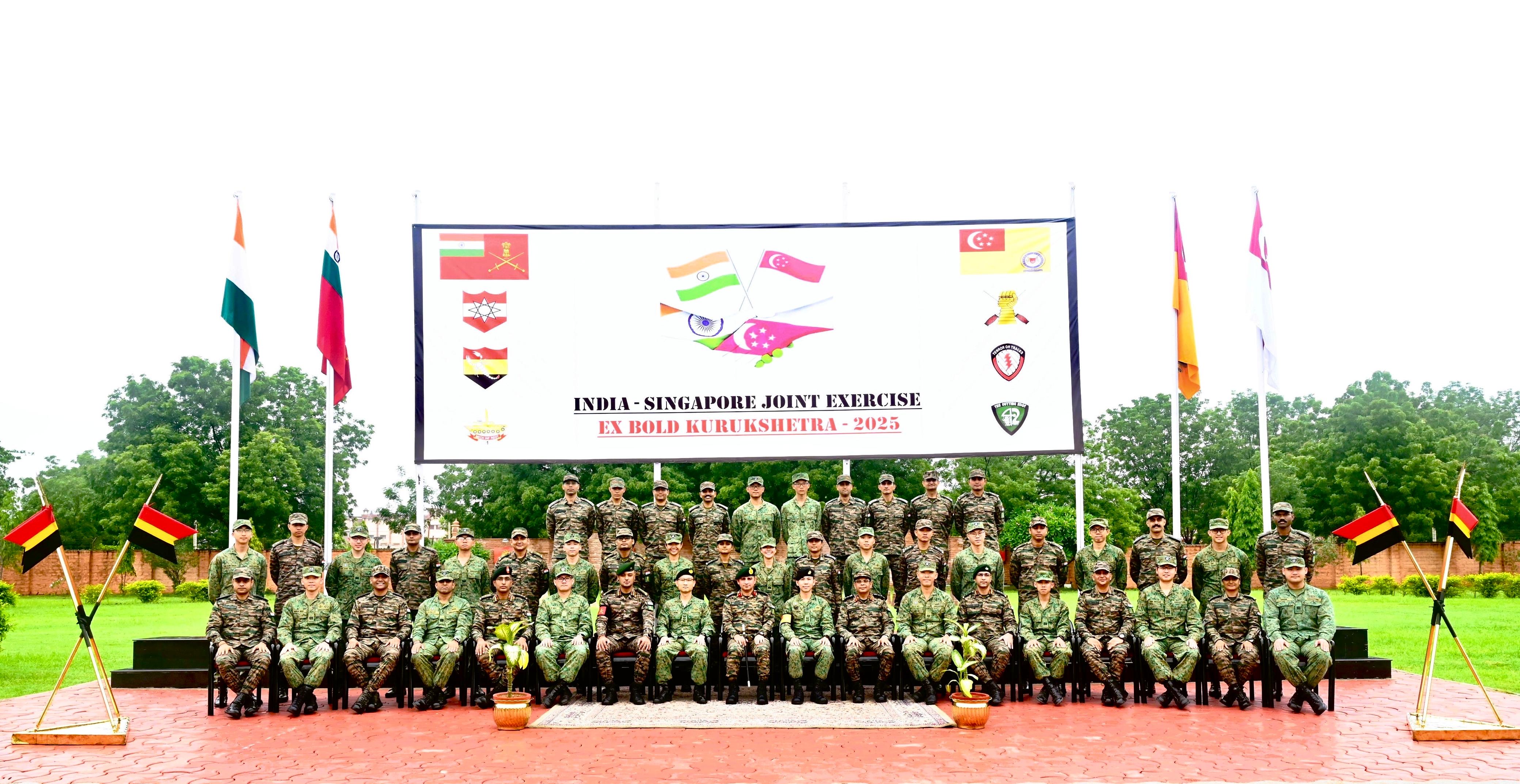
- 28 Jul 2025
In News:
The 14th edition of Exercise Bold Kurukshetra was commenced in Jodhpur, Rajasthan, reinforcing India–Singapore military ties. This bilateral military exercise is a key component of both countries’ growing defence cooperation.
About Exercise Bold Kurukshetra:
|
Feature |
Description |
|
Type |
Bilateral joint military exercise |
|
First Initiated |
2005 |
|
Edition |
14th edition (2025) |
|
Location (2025) |
Jodhpur, Rajasthan |
|
Duration |
28 July – 4 August 2025 |
|
Format |
Tabletop Exercise and Computer-Based Wargame |
|
Objective |
Enhance interoperability, validate mechanised warfare tactics, and simulate UN peacekeeping operations |
Participating Contingents:
|
Country |
Unit/Regiment |
|
India |
Mechanised Infantry Regiment |
|
Singapore |
42nd Armoured Regiment, 4th Singapore Armoured Brigade |
Key Features:
- Mechanised Warfare Focus: Validates joint operational tactics in modern armoured and mechanised operations.
- UN Mandate Simulation: Exercises conducted under simulated Chapter VII of the UN Charter, preparing both armies for peacekeeping and peace enforcement missions.
- Ceremonial Traditions: Enhances military camaraderie through shared symbolism and operational command handovers.
- Equipment Display: The exercise concludes with a display of Indian Army equipment, highlighting India's indigenous defence capabilities.
Strategic Significance:
|
Domain |
Contribution |
|
Defence Diplomacy |
Deepens bilateral military cooperation with Singapore |
|
Indo-Pacific Stability |
Enhances India’s strategic role in maintaining peace in the Indo-Pacific |
|
UN Peacekeeping |
Builds joint operational readiness for multinational UN-mandated missions |
|
Capacity Building |
Boosts joint planning and execution skills for mechanised combat environments |
Sohrai Art of Jharkhand
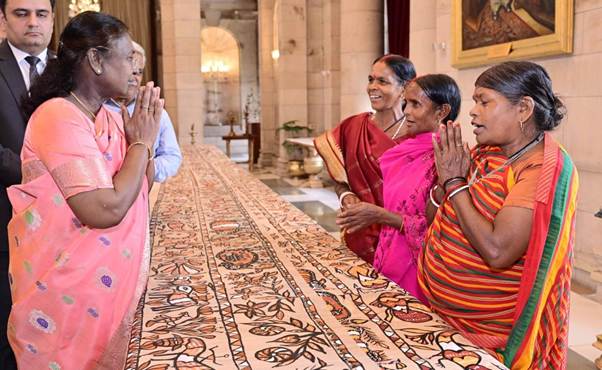
- 28 Jul 2025
In News:
Sohrai Art from Jharkhand was prominently showcased during Kala Utsav 2025 held at Rashtrapati Bhavan, where President Droupadi Murmu hailed it as reflecting the “soul of India.” The event marked a significant national recognition for this traditional tribal art.
About Sohrai Art:
|
Aspect |
Details |
|
Tribal Origins |
Practised by Santhal, Munda, and Oraon tribes in Jharkhand. |
|
Region |
Predominantly in Hazaribagh, Santhal Parganas, and parts of eastern Bihar. |
|
Occasion |
Ritual wall-painting during Diwali and harvest festivals. |
|
Purpose |
Thanksgiving for livestock and land fertility; linked to agrarian rituals and spiritual ecology. |
|
Artists |
Traditionally women; passed down through generations orally and practically. |
Key Features of Sohrai Art:
- Motifs: Stylized animals, birds, trees, and rural life, symbolizing harmony with nature.
- Materials: Uses natural pigments such as red ochre, white kaolin, yellow clay, and black manganese.
- Tools: Made with bamboo twigs, chewed sticks, and cloth instead of synthetic brushes.
- Cultural Essence: Embodies a blend of mythology, agrarian life, womanhood, and sustainability.
Kala Utsav 2025: National Recognition
- Held at Rashtrapati Bhavan as part of the Artists in Residence Programme.
- Ten tribal artists from Hazaribagh showcased their work to a national audience.
- President Murmu lauded the art as a symbol of India’s cultural depth and ecological consciousness.
Institutional Support: IGNCA’s Role
- Indira Gandhi National Centre for the Arts (IGNCA) and its Regional Centre in Ranchi coordinated artist participation.
- IGNCA continues to promote indigenous art forms, ensuring cultural preservation and artist recognition.
Cultural and Policy Relevance:
- Art & Culture: Highlights India’s rich tribal and folk heritage.
- Women Empowerment: Female-centric art practice promoting rural livelihoods.
- Sustainable Development: Use of eco-friendly materials and community-led traditions.
- Tribal Development Schemes: Aligns with objectives of schemes like TRIFED, GI tagging, and cultural promotion under Tribal Affairs Ministry.
Rajendra Chola I
- 28 Jul 2025
In News:
India is commemorating 1,000 years of Rajendra Chola I’s Southeast Asian expedition through cultural events and heritage projects.
Key Highlights:
Rajendra I Chola (r. 1014–1044 CE), son of Rajaraja I, was one of India’s most formidable monarchs, remembered for transforming the Chola Empire into a powerful naval and commercial force that extended influence far beyond the Indian subcontinent.
Background: Rise of the Chola Empire
- Imperial Cholas, based in Thanjavur, rose to prominence after Vijayalaya Chola captured the region around 850 CE.
- Successive rulers like Aditya I and Rajaraja I expanded the empire by defeating the Pallavas, Pandyas, and Rashtrakutas.
- Rajaraja I built the Brihadeeswarar Temple (1010 CE) and initiated overseas campaigns, laying the foundation for maritime expansion.
Rajendra I Chola’s Expansionist Vision
- Ascended the throne in 1014 CE, though anointed in 1012 CE.
- Sought to establish Chola supremacy across land and sea.
- Completed the conquest of Sri Lanka, capturing King Mahinda V and consolidating the southern frontier.
- Defeated the Western Chalukyas, Pandyas, Cheras, and Palas, earning the title Gangaikonda Chola (“the Chola who conquered the Ganges”).
New Capital – Gangaikondacholapuram
- To commemorate northern victories, Rajendra founded Gangaikondacholapuram, an imperial capital that served as a political, administrative, and cultural hub.
Naval Expeditions to Southeast Asia
Motivation:
- Establish maritime supremacy, protect trade routes, and forge strategic alliances.
- Respond to shifting alliances in Southeast Asia (Khmer Empire vs Srivijaya).
The Campaign (c. 1025 CE):
- Launched a massive naval expedition targeting the Srivijaya Empire (modern-day Indonesia, Malaysia).
- Conquered strategic regions like:
- Kadaram (Kedah)
- Pannai (Sumatra)
- Malaiyur (Malay Peninsula)
- Tambralinga, Pegu, and Kalingga
Significance:
- Asserted dominance over key trade routes to Song China.
- Cemented Chola-Khmer alliance.
- Extended Tamil commercial and cultural influence across Southeast Asia.
Commercial and Cultural Legacy
- Promoted merchant guilds such as Manigramam, Ayyavole, and Ainnurruvar, which flourished in overseas ports.
- Tamil inscriptions, artifacts, and temple architecture found across Indonesia, Malaysia, Cambodia, and China.
- Tamil loanwords persist in the Karo language of Sumatra.
- Contributed to a Tamil diaspora that influenced art, architecture, trade, and religion in Southeast Asia.
Military and Administrative Excellence
- Maintained a vast army and navy.
- Efficient administrative system with support from Krishnadeva Kendras (early research and extension centers).
- Built upon the model of divine kingship with Nataraja (Shiva as cosmic dancer) symbolizing spiritual legitimacy.
Global Recognition and Commemoration
- India’s training ship TS Rajendra, commissioned in 1972, honours his naval prowess.
- Chinese accounts from the 11th century describe the Chola court’s wealth, discipline, and grandeur.
- The Coromandel Coast derives its name from Cholamandala ("realm of the Cholas").
Conclusion
Rajendra I Chola stands out in Indian history as a maritime emperor, who not only expanded territorial frontiers but also projected Indian influence across Southeast Asia. His legacy lies in blending military conquests with trade diplomacy, and establishing cultural ties that endured for centuries. His reign marks one of the earliest and most successful examples of Indian soft power abroad.
Climate-Resilient and Organic Agriculture: Parliamentary Committee Report Highlights
- 28 Jul 2025
In News:
The Committee on Estimates (2024–25) has submitted its Sixth Report to Parliament, emphasizing the pressing need for a climate-resilient and ecologically sustainable agricultural system in India. The report presents a roadmap aimed at tackling the vulnerabilities posed by climate change, soil degradation, and unsustainable farming practices.
Key Challenges in Indian Agriculture:
1. Climate Vulnerability:
- Projected Yield Decline: Crop yields may fall by 4.5% to 9% in the medium term due to climate-induced stresses.
- District-Level Risks: Out of 310 climate-vulnerable districts identified by the IPCC,
- 109 are at ‘very high risk’,
- 201 are categorized as ‘highly vulnerable’.
2. Soil Health Crisis:
- Extent of Degradation: Nearly 30% of India's land suffers from soil degradation.
- Root Causes: Excessive chemical inputs (urea and pesticides) and loss of organic matter have disrupted nutrient cycles and reduced fertility.
3. Economic Pressures: The Green Revolution model now shows diminishing returns, with rising input costs contributing to farmer indebtedness and suicides.
Policy Shift Towards Sustainable Farming:
1. Natural Farming:
- National Mission on Natural Farming (NMNF): Launched in 2023–24 as an independent scheme, expanding upon the earlier Bhartiya Prakritik Krishi Paddati (BPKP).
- Focus: Chemical-free agriculture, soil regeneration, and farmer self-reliance.
2. Organic Farming Initiatives:
- Paramparagat Krishi Vikas Yojana (PKVY): Promotes cluster-based organic farming using Participatory Guarantee Systems (PGS) for certification.
- MOVCDNER: Aims to develop organic value chains in the North Eastern Region, leveraging traditional practices and rich biodiversity.
Challenges in Transition:
- Yield reductions during the initial switch.
- Complex and often expensive certification procedures.
- Weak market linkages and poor consumer awareness.
- Training and knowledge gaps among farmers.
- Financial risks for small and marginal farmers lacking safety nets.
Recommendations of the Committee:
- Integrate climate-resilient agriculture into national schemes like PM-KISAN, MGNREGA, and RKVY.
- Provide green subsidies to farmers offering ecological services.
- Establish a national agroecological transition framework combining research, training, and market access.
- Empower Krishi Vigyan Kendras (KVKs) with digital tools and decentralized funding for field-level implementation.
Scaling Up Climate-Resilient Strategies:
National Innovations in Climate Resilient Agriculture (NICRA):
- Launched: 2011 by the Indian Council of Agricultural Research (ICAR).
- Objective: Equip farming systems to adapt to climate variability.
Key Components:
- Strategic research on climate-tolerant varieties.
- Technology demonstrations in vulnerable districts.
- Capacity building for farmers and extension staff.
- Infrastructure enhancement at research institutions.
Notable Achievements in NICRA Villages:
- 2,900+ climate-resilient varieties developed (e.g., heat-tolerant wheat, drought-resistant rice).
- 28–37% rise in crop productivity.
- 10–12% increase in livestock productivity.
- 35–40% higher farm incomes compared to non-NICRA areas.
Way Forward:
- Expand NICRA initiatives to cover more vulnerable districts with dedicated funding.
- Create agroecological clusters to support localized natural/organic farming models.
- Simplify and support organic certification and branding to enhance marketability.
- Promote ministerial convergence among Agriculture, Environment, and Rural Development departments for cohesive implementation.
Environmental Flow (E-Flow) in Indian Rivers
- 28 Jul 2025
In News:
Union Jal Shakti Minister Shri C.R. Patil recently chaired a crucial meeting focused on the Environmental Flow (E-Flow) of the Ganga River and its tributaries, with particular attention to the Yamuna River. This initiative is a part of the broader effort to ensure the ecological sustainability of India’s river systems.
What is Environmental Flow (E-Flow)?
Environmental Flow refers to the quantity, timing, and quality of water flow necessary to sustain freshwater ecosystems and the livelihoods dependent on them. It ensures that rivers maintain their ecological integrity, supporting aquatic life, estuarine health, and human usage in a sustainable manner.
Why is E-Flow Important?
- Maintains ecological balance in rivers and estuaries.
- Supports aquatic biodiversity, especially key fish species.
- Provides long-term ecological and economic benefits.
- Balances human needs and environmental sustainability, especially in overexploited river basins.
Challenges in Maintaining E-Flow:
- Construction of dams and barrages.
- Pollution and urban encroachments.
- Over-extraction of water for agriculture and industry.
These interventions disrupt natural flow patterns, threatening riverine ecosystems and dependent communities.
Government Initiatives and Studies:
Environmental Flow Notification (2018):
- Introduced by the government to regulate minimum required flows in the Ganga. However, a review of its impact is now being undertaken to determine its effectiveness and the need for improvements.
Recent Meeting Outcomes:
- Emphasis on strengthening the e-flow framework, especially for the Yamuna River, which faces severe pollution and over-extraction issues.
- Need for a robust, inclusive, and scientific approach to water management.
Studies Approved Under National Mission for Clean Ganga (NMCG):
|
Institution |
Rivers/Sub-Basins Assigned |
|
NIH Roorkee |
Chambal, Son, Damodar |
|
IIT Roorkee |
Ghaghara, Gomti |
|
IIT Kanpur |
Kosi, Gandak, Mahananda |
These studies aim to assess current flow conditions and recommend sustainable flow levels.
Way Forward:
- Expedite assessments under NMCG and ensure multi-stakeholder participation.
- Develop comprehensive water flow strategies for heavily impacted rivers like the Yamuna.
- Strengthen decision-making frameworks to balance ecological and human needs.
Decline of Coral Reefs in Lakshadweep: A 24-Year Study
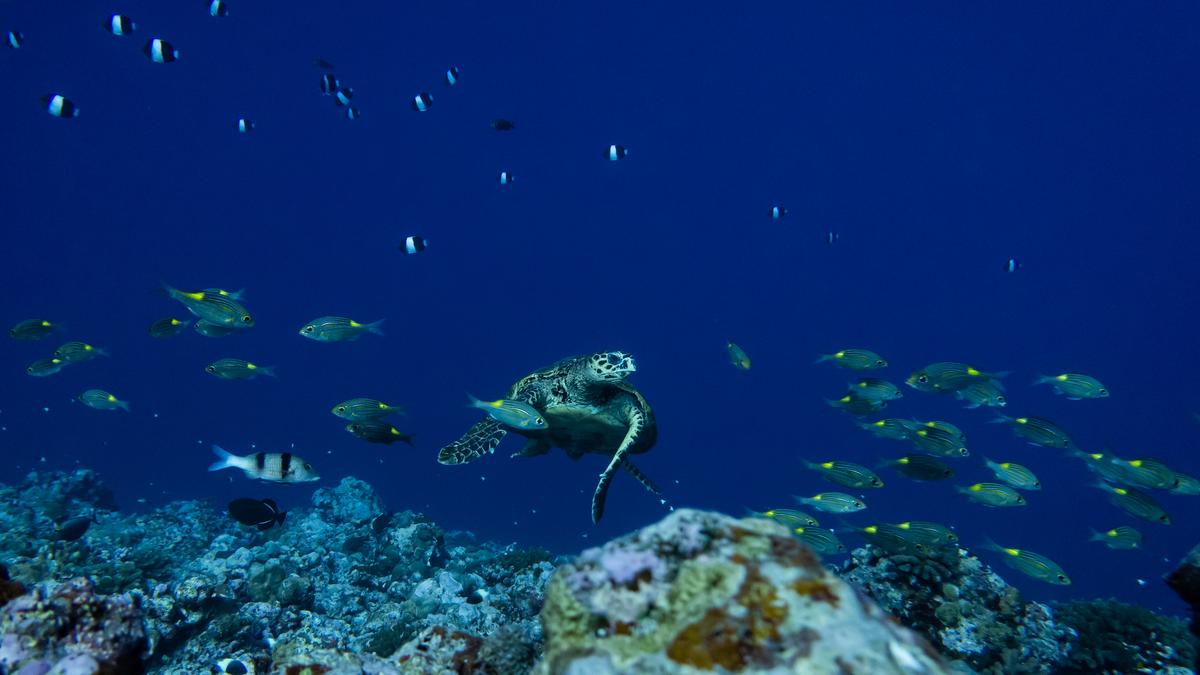
- 27 Jul 2025
In News:
A recent 24-year study (1998–2022) of coral reefs in the Lakshadweep Archipelago revealed that live coral cover has declined by nearly 50%, from about 37.2% to 19.1%. The research, conducted across three atolls—Agatti, Kadmat, and Kavaratti—highlights the severe impact of repeated marine heatwaves linked to climate change.
What are Corals?
Corals are small, soft-bodied marine invertebrates belonging to the Cnidaria group. Individual corals, called polyps, secrete a calcium carbonate exoskeleton, forming vast reef structures. Coral reefs provide crucial habitats for about 25% of marine life and support over 1 billion people worldwide with food, livelihoods, and coastal protection.
Types and Distribution:
India’s coral reefs are mainly found in the Gulf of Kutch, Gulf of Mannar, Andaman & Nicobar Islands, Lakshadweep Islands, and Malvan.
Causes of Coral Decline:
- Marine Heatwaves & Climate Change: Rising sea surface temperatures disrupt the symbiotic relationship between corals and their algae (zooxanthellae), causing bleaching and mortality.
- Ocean Acidification: Increased CO? lowers ocean pH, hampering coral skeleton formation.
- Pollution: Land runoff with fertilizers, pesticides, and heavy metals harms coral health.
- Physical Damage: Coastal development, sedimentation, and unsustainable fishing.
- Overfishing: Imbalance in reef ecosystems due to loss of algae-eating fish.
Key Findings from the Lakshadweep Study:
- Coral mortality from bleaching has decreased over time but so has the reefs’ recovery rate.
- Heat-sensitive coral species have largely disappeared, leaving more stress-tolerant species like Porites dominant.
- Recovery accelerates only if reefs are given at least a six-year gap between bleaching events.
- The 2010 marine heatwave was the most severe, with a Degree Heating Week (DHW) value of 6.7, indicating significant heat stress.
- The study emphasizes the need for longer recovery periods between bleaching for coral regeneration.
Implications for Conservation:
- The study provides a predictive framework to identify reefs vulnerable to bleaching and prioritize restoration.
- Local conservation must be combined with urgent global climate action to reduce the frequency of heatwaves.
- Without global intervention, even resilient coral species may not survive repeated disturbances.
This study underscores the vulnerability of India’s coral reefs, especially in Lakshadweep, to climate change and highlights the urgent need for integrated local and global conservation efforts.
ICJ Declares Clean Environment a Human Right
- 27 Jul 2025
In News:
In a historic advisory opinion delivered on 23rd July 2025, the International Court of Justice (ICJ) recognized the right to a clean, healthy, and sustainable environment as a fundamental human right. The opinion was issued at the request of the UN General Assembly (2023) following lobbying by Vanuatu and supported by over 130 countries, mainly small island developing states (SIDS) vulnerable to climate change.
Key Legal Questions Addressed:
- What are states’ obligations under international law to mitigate climate change?
- What are the legal consequences of failing to act on climate commitments?
Major Highlights of the ICJ Advisory Opinion:
1. Environment as a Human Right
- The Court affirmed that access to a clean, healthy, and sustainable environment is inherent to the enjoyment of other human rights.
- Based on customary international law, UNGA Resolution 76/300 (2022), and international human rights treaties.
2. Binding Legal Duties
- States are bound under UNFCCC, Kyoto Protocol, and Paris Agreement to:
- Implement mitigation and adaptation policies.
- Submit and update Nationally Determined Contributions (NDCs).
- Facilitate technology transfer and climate finance.
3. Due Diligence and Liability
- States must prevent significant transboundary environmental harm and regulate both public and private actors (e.g., fossil fuel companies).
- Failure to act amounts to an internationally wrongful act, triggering:
- Cessation,
- Guarantees of non-repetition,
- Compensation or restitution.
4. Historical Emissions & Responsibility
- The ICJ accepted that cumulative emissions can be legally attributed to specific states.
- Supports legal claims for reparations and accountability based on historic contributions to climate change.
5. Climate Obligations as Erga Omnes
- These duties are owed to the entire international community.
- Any state can seek enforcement, regardless of direct injury.
6. Scientific Attribution Accepted
- Climate science was admitted as legal evidence.
- Allows courts to establish causal links between emissions and environmental harm.
Geopolitical & Legal Implications:
- Empowers SIDS and developing nations in climate negotiations.
- Opens doors to domestic and international litigation based on environmental rights.
- Highlights inadequacy of current global agreements in ensuring timely climate action.
- Major emitters like USA and Russia have resisted legally binding obligations through courts.
Relevance for India:
- Reinforces Article 21 (Right to Life) and Article 48A (Protection of Environment) of the Indian Constitution.
- Can influence Indian courts and tribunals (e.g., NGT, Supreme Court) in:
- Air and water pollution cases,
- Waste management,
- Climate adaptation litigation.
This ruling marks a critical shift in international environmental law, signaling greater legal accountability for climate action and strengthening the legal foundation for future climate justice claims.
National Cooperation Policy 2025
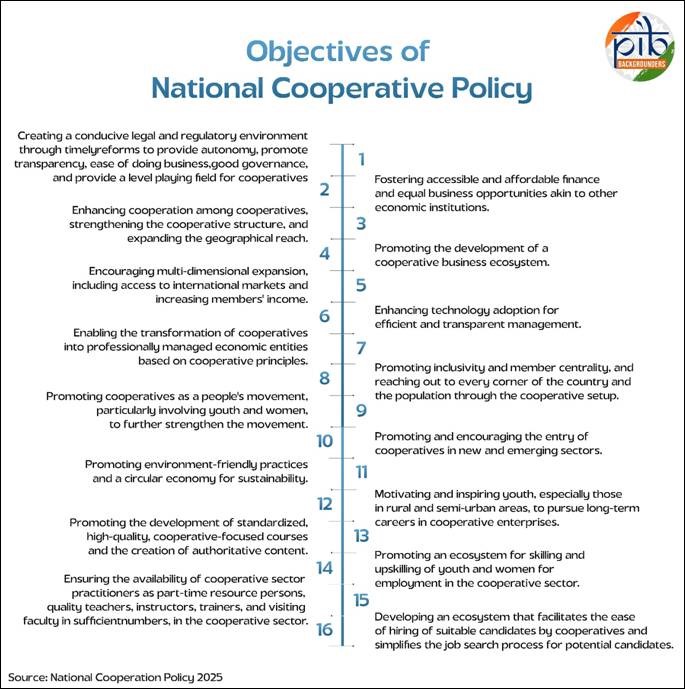
- 27 Jul 2025
In News:
- The National Cooperation Policy (NCP) 2025 marks a strategic roadmap for revitalizing India’s cooperative sector to meet the nation’s goal of becoming “Viksit” by 2047.
- Rooted in the ethos of Sahkar-se-Samriddhi, this policy aims to build on the unique strengths of India’s cooperative tradition, promote economic democratization, and uplift rural economies through collective participation.
- Mission: To create an enabling legal, economic, and institutional framework that will strengthen and deepen the cooperative movement at the grassroots level and facilitate the transformation of cooperative enterprises into professionally managed, transparent, technology-enabled, vibrant, and responsive economic entities to support production by the masses.
What is a Cooperative?
A cooperative is an autonomous association of persons, united voluntarily to meet their common economic, social, and cultural needs and aspirations through a jointly owned and democratically member-controlled enterprise.
Difference between Credit & Non-Credit Cooperatives
|
Aspect |
Credit Cooperatives |
Non-Credit Cooperatives |
|
Function |
Provide financial services like loans and savings |
Provide goods/services like farming inputs, housing, etc. |
|
Examples |
PACS, Urban Cooperative Banks |
Dairy, Marketing, Consumer, Housing Cooperatives |
The Indian cooperative movement has been the flag bearer of a participatory, people-led development model aimed at socio-economic upliftment at the grassroots level for more than a century.
Strategic Pillars:
The policy is structured around six mission pillars and 16 objectives:
- Strengthening the Foundation – Legal reforms, better governance, access to finance, digitalization.
- Promoting Vibrancy – Creating business ecosystems, expanding exports and rural clusters.
- Making Cooperatives Future-Ready – Technology integration, professional management, cooperative stack.
- Promoting Inclusivity and Deepening Reach – Promoting cooperative-led inclusive development and cooperatives as a people’s movement.
- Entering New and Emerging Sectors – Biogas, clean energy, warehousing, healthcare, etc.
- Shaping Young Generation for Cooperative Growth – Courses, training, employment exchanges.
Key Highlights of the Policy
Legislative and Institutional Reforms
- Encourage States to amend cooperative laws (Cooperative Societies Acts and Rules) to enhance transparency, autonomy and the ease of doing business.
- Promote digitalization of registrar offices and real-time cooperative databases.
- Revive sick cooperatives with institutional mechanisms.
Financial Empowerment
- Preserve and promote the three-tier Primary Agriculture Credit Societies - District Central Cooperative Bank - State Cooperative Bank credit structure.
- Promote cooperative banks and umbrella organizations (like National Urban Cooperative Finance & Development Corporation).
- Enable cooperative banks to handle government businesses.
Business Ecosystem Development
- Model cooperative villages with multipurpose PACS as growth engines.
- Encouraging States/UTs to develop at least one model cooperative village.
- Develop rural economic clusters (e.g., honey, spices, tea).
- Support branding under the ‘Bharat’ brand.
Model Cooperative Village
A Model Cooperative Village is a self-reliant rural unit developed through a cooperative-led, household-focused approach to enhance livelihoods and productivity.
Future-Readiness & Technology
- Develop a national ‘Cooperative Stack’ integrating with Agri-stack and databases.
- Promote Open Network for Digital Commerce (ONDC) and Government e-marketplace (GeM) platform integration.
- Encourage research and innovation through cooperative incubators and Centres of Excellence.
Open Network for Digital Commerce (ONDC)
The ONDC is a transformative initiative by the Department for Promotion of Industry and Internal Trade (DPIIT), Ministry of Commerce, Government of India aimed at democratizing digital commerce. Launched in April 2022, ONDC aims at promoting open networks for all aspects of exchange of goods and services over digital or electronic networks.
Government e-Marketplace (GeM)
GeM is an online platform for public procurement in India. The initiative was launched on August 09, 2016 by the Ministry of Commerce and Industry with the objective to create an open and transparent procurement platform for government buyers.
Inclusivity Measures
- Active participation of youth, women, SC/STs, and differently-abled in cooperatives.
- Model bye-laws for gender representation and transparent governance.
- Cooperative awareness campaigns in schools and colleges.
Model Bye-Laws
The Model Bye-laws are simply a representative sample and a guide to frame bye-laws of a multi-state cooperative society.
Sectoral Diversification
- Promote cooperatives in new and emerging sectors such as:
- Renewable energy,
- Waste management,
- Health and education,
- Mobile-based aggregator services (e.g., for plumbers, taxi drivers),
- Organic and natural farming,
- Biogas and ethanol production, etc.
Youth-Oriented Capacity Building
- Develop cooperative-focused courses in higher education institutions (HEIs).
- Build a national digital cooperative employment exchange.
- Promote financial and digital literacy among youth.
- Recruit quality cooperative teachers and resource persons.
Implementation and Monitoring
A robust multi-tier implementation structure is proposed:
- Implementation Cell within the Ministry of Cooperation with technical Project Management Unit support for effective and timely implementation of the policy.
- National Steering Committee on Cooperation Policy chaired by the Union Cooperation Minister will be constituted for overall guidance, inter-ministerial coordination, periodic policy review, etc.
- Policy Implementation and Monitoring Committee headed by the Union Cooperation Secretary for coordination with States, troubleshooting implementation bottlenecks, periodic monitoring and evaluation, etc.
India Skills Accelerator Initiative
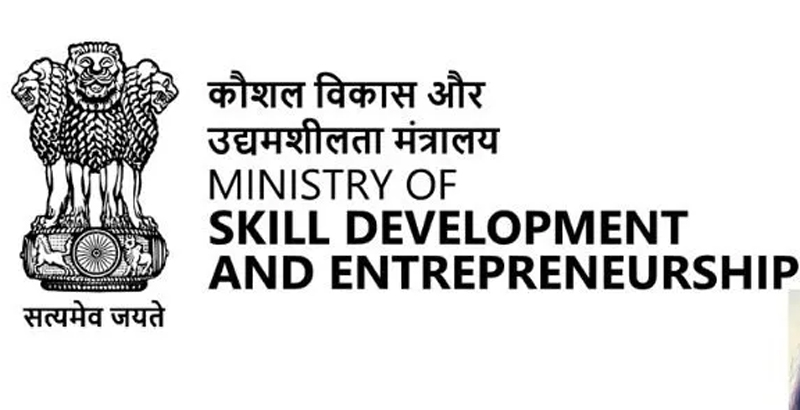
- 27 Jul 2025
In News:
The Ministry of Skill Development and Entrepreneurship (MSDE), in collaboration with the World Economic Forum (WEF), deliberated on the “India Skills Accelerator” initiative.
Key Highlights:
- Launched by: Ministry of Skill Development and Entrepreneurship (MSDE)
- Collaborating Partner: World Economic Forum (WEF)
- Announced on: 8th April 2025 during a high-level roundtable at Kaushal Bhawan, New Delhi
- Objective: To strengthen India's skilling ecosystem through inclusive upskilling and reskilling, enhanced government-industry collaboration, and investment in lifelong learning, particularly in high-growth sectors such as Artificial Intelligence, robotics, and clean energy.
- Key Features:
- Public-Private Collaboration: Structured as a national platform bringing together government and private sector stakeholders; notably, 2 of the 4 co-chairs are from the private sector.
- Focus Areas:
- Promotes scalable and adaptive training models
- Facilitates agile career transitions for the workforce
- Aligns education and training with evolving industry demands
- Strategic Approach:
- Raising awareness and changing perceptions about future skills
- Encouraging cross-sectoral collaboration and sharing of best practices
- Reforming institutional frameworks to support a responsive and dynamic skilling system
- Significance: The initiative is aligned with India’s goal of building a future-ready workforce by addressing skill mismatches and preparing youth for rapidly transforming industries. It contributes to the broader national missions like Skill India, Digital India, and Make in India.
AI for India 2.0 Programme
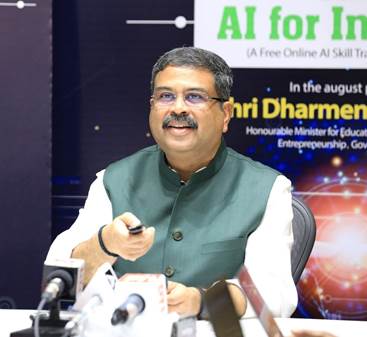
- 27 Jul 2025
In News:
The Minister of State (Independent Charge), Ministry of Skill Development and Entrepreneurship (MSDE), informed the Rajya Sabha about AI for India 2.0 Programme.
Key Highlights:
- Launched: 15th July 2023, on the occasion of World Youth Skills Day
- Implementing Bodies: Joint initiative by Skill India and GUVI (an ed-tech platform incubated by IIT Madras and IIM Ahmedabad)
- Accreditation: Recognized by NCVET and IIT Madras
- Objective: To democratize access to emerging technologies like Artificial Intelligence (AI) and Machine Learning (ML), especially among youth from non-English-speaking and rural backgrounds.
- Key Features:
- Free Online Training: Offers no-cost courses in AI and ML.
- Vernacular Focus: Educational content provided in 9 Indian languages including Hindi, Telugu, and Kannada, enhancing accessibility for non-English speakers.
- Target Audience: College students, recent graduates, and early-career professionals, with a focus on learners from rural regions.
- Course Content: Includes expert-curated Python programming courses designed to enhance technical proficiency.
- National Recognition: The programme is nationally accredited, ensuring quality and credibility.
- Significance: This initiative aims to empower the Indian youth by equipping them with industry-relevant digital skills, thus aligning with the broader goals of digital inclusion and skilling under Digital India and Skill India missions.
HOPS-315 Discovery
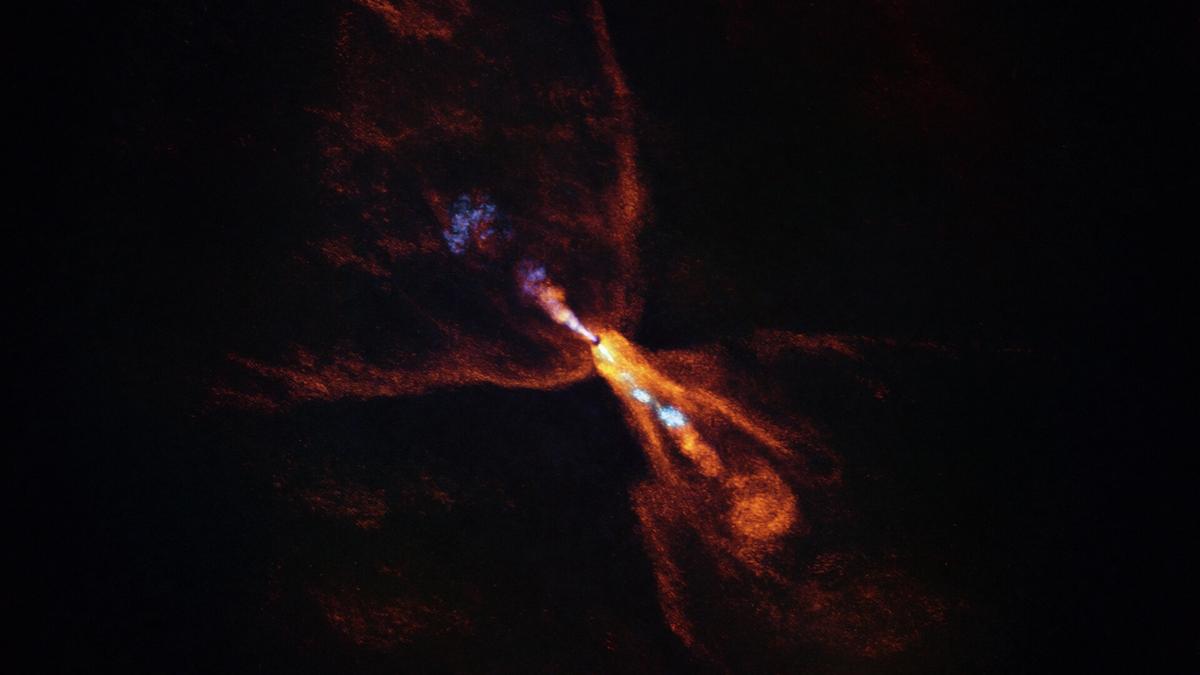
- 26 Jul 2025
In News:
Astronomers, for the first time, have observed solid rock condensation from vapor around a newborn protostar, HOPS-315, located in the Orion Molecular Cloud. This breakthrough offers unprecedented insight into the earliest stages of rocky planet formation, similar to how Earth likely formed.
About HOPS-315
- Type: Protostar (young, still-forming star)
- Location: Orion constellation (~1,300 light-years from Earth)
- Key Feature: Surrounded by a tilted protoplanetary disc of dust and gas, allowing deep observational access to its planet-forming region.
Instruments & Research Collaboration
- Telescopes Used:
- James Webb Space Telescope (JWST) – Spectral analysis via NIRSpec and MIRI instruments.
- Atacama Large Millimeter/submillimeter Array (ALMA) – Millimeter-wavelength mapping of gases and dust.
- Research Consortium: Scientists from France, the Netherlands, Sweden, Taiwan, and the USA.
- Published In: Nature (2025)
Key Observations & Findings
- Crystallization Process:
- Initial heating vaporizes dust (~1300 K near 1 AU from star).
- Subsequent cooling condenses vapor into refractory minerals (e.g., forsterite, enstatite, silica).
- Spectroscopic Evidence:
- Silicon monoxide (SiO) gas detected at ~470 K.
- Presence of crystalline silicates within 2.2 AU of the star — the zone where rocky planets typically form.
- ALMA Findings:
- Cooler gas in outer disc.
- Absence of slow SiO outflows confirms crystals are part of the disc atmosphere — not stellar jets.
Why It Matters
|
Significance |
Explanation |
|
First-Ever Observation |
Direct evidence of solid rock condensing from vapor around a protostar. |
|
Planet Formation Insight |
Confirms the earliest phase of rocky planet creation — from vapor to mineral solidification. |
|
Solar System Parallel |
Chemistry mirrors early Earth meteorites, suggesting universal mechanisms in rocky planet formation. |
|
Rare Viewing Geometry |
Tilted disc of HOPS-315 provided rare access to inner disc regions, usually obscured in other systems. |
National Sports Governance Bill 2025
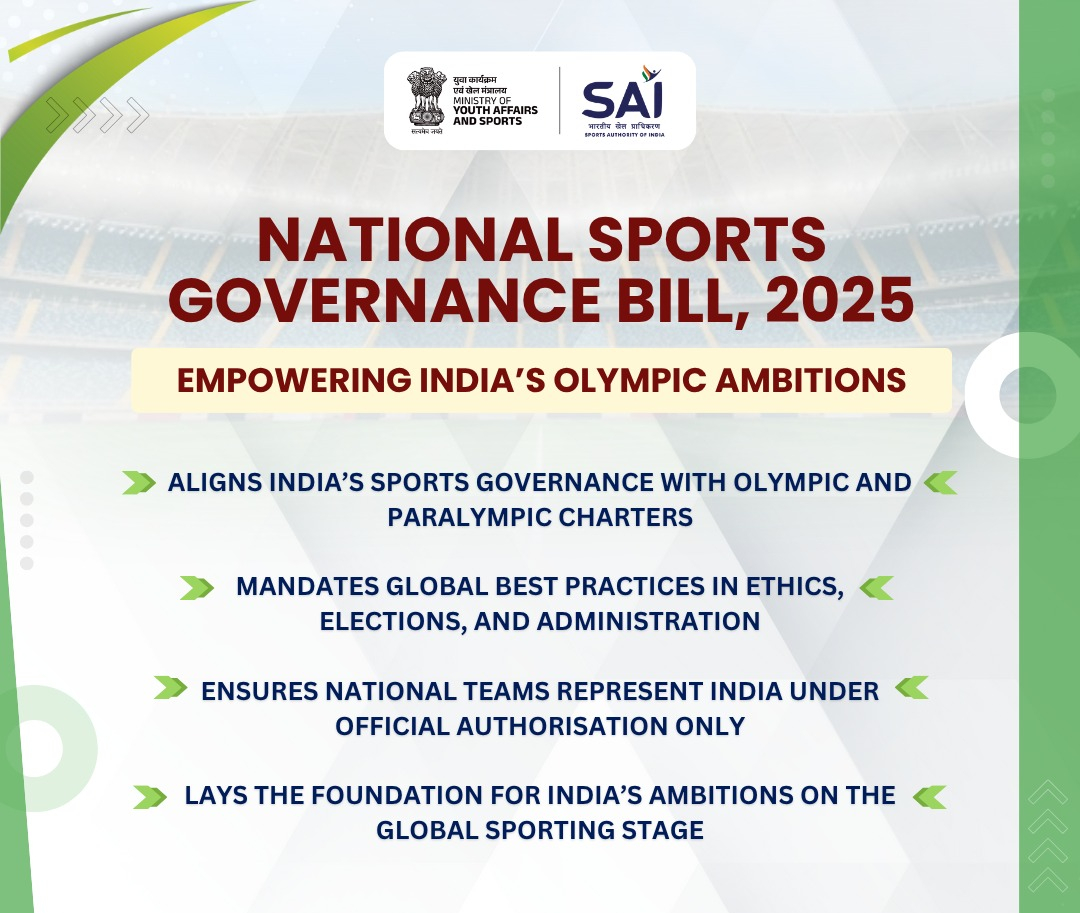
- 26 Jul 2025
In News:
The National Sports Governance Bill, 2025, introduced in the Lok Sabha, marks a significant legislative effort to restructure and reform India's sports administration framework. It seeks to replace the non-binding National Sports Code of 2011 with a statutory, enforceable law that prioritizes transparency, athlete welfare, and institutional accountability.
Key Objectives of the Bill
- Establish a uniform governance system across all sports federations.
- Legally regulate bodies like the Board of Control for Cricket in India (BCCI).
- Align Indian sports governance with international standards, particularly ahead of India’s 2036 Olympic bid.
- Introduce dedicated institutions for oversight, dispute resolution, and electoral transparency.
Major Structural Changes
1. Statutory Institutions Established
|
Institution |
Function |
|
National Sports Board (NSB) |
Recognition, funding eligibility, ethics compliance, and oversight of NSFs. |
|
National Sports Tribunal |
Dispute resolution (e.g., selection, elections, governance conflicts). |
|
National Sports Election Panel |
Ensures free, fair, and independent elections of sports bodies. |
Governance Reforms in National Sports Bodies
- Recognition & Regulation: All National Sports Federations (NSFs), including the BCCI, must seek annual recognition from the NSB.
- Affiliation: National bodies must have aligned state and district units, and comply with international federations' statutes.
- Code of Ethics: Mandatory for members, athletes, coaches, sponsors, and officials.
- Grievance Redressal: Internal mechanisms must be instituted by each federation.
Administrative Structure of National Bodies
- General Body: Equal representation from all affiliates and ex-officio members.
- Executive Committee: Maximum 15 members, mandatory inclusion of at least 4 women and 2 elite athletes.
- Age Limit: Officials must be aged 25–70 years (exceptions up to 75 years if permitted by international rules).
- Term Limit: Max three consecutive terms of four years in the same or different posts, with a cooling-off period.
Role of the National Sports Board (NSB)
The NSB acts as a central regulatory authority, similar to SEBI in financial markets.
Powers and Functions:
- Granting/suspending/canceling recognition of sports bodies.
- Investigating misuse of funds or violation of athlete welfare norms.
- Issuing guidelines for ethics, governance, and international compliance.
- Forming ad-hoc bodies in case of international de-recognition.
Composition: Chairperson and members with expertise in sports governance, law, and public administration. Appointed by the central government through a search-cum-selection committee.
National Sports Tribunal
A quasi-judicial body to resolve disputes involving federations, athletes, and administration.
Composition:
- Chairperson: Sitting/former Supreme Court Judge or Chief Justice of a High Court.
- Two expert members from sports, law, or public administration.
Appointed by: A committee comprising the Chief Justice of India (or nominee), the Law Secretary, and the Sports Secretary.
Appeals: Lie directly to the Supreme Court, except where international regulations mandate the Court of Arbitration for Sport (CAS) in Switzerland.
Jurisdiction Excludes: Disputes related to international sports events and internal matters of global sports bodies.
Electoral Oversight
A National Sports Election Panel will be constituted, comprising:
- Former Election Commissioners of India
- Former Chief Electoral Officers and Deputy Election Commissioners
Purpose:
- Supervise elections of executive committees of national federations.
- Ensure electoral integrity at the state and district levels via affiliate panels.
Legal Enforceability vs. Sports Code 2011
|
Parameter |
Sports Code 2011 |
Governance Bill 2025 |
|
Legal Status |
Advisory guidelines |
Statutory law |
|
Enforceability |
Non-binding |
Legally enforceable |
|
Gender/Athlete Representation |
Not mandated |
4 women & 2 elite athletes required |
|
Dispute Resolution |
Ministry-driven |
National Sports Tribunal |
|
BCCI Regulation |
Outside purview |
Brought under framework |
|
Election Oversight |
Ministry oversight |
Independent election panel |
|
RTI Applicability |
Exempt (BCCI) |
Mandatory for recognized bodies |
Bringing BCCI Under the Legal Framework
Historically resisting regulation, the BCCI will now be required to:
- Register annually with the NSB.
- Submit to the National Sports Tribunal for disputes.
- Comply with RTI Act provisions, if it seeks government recognition and funding.
This change is significant as cricket is now part of the 2028 Los Angeles Olympics, making BCCI subject to international governance norms under the Olympic Charter.
Provision for Exemptions
The central government may exempt specific sports bodies from certain provisions of the Bill, in the public interest or for the promotion of specific sports disciplines.
Parallel Legislation: Anti-Doping Amendment
The National Anti-Doping (Amendment) Bill, 2025 was also introduced, addressing World Anti-Doping Agency (WADA) concerns. It:
- Retains the National Board for Anti-Doping, but strips it of oversight over NADA.
- Restores NADA’s independence, aligning Indian anti-doping efforts with international norms.
Henley Passport Index 2025
- 26 Jul 2025
In News:
The Henley Passport Index 2025 reveals significant shifts in global mobility, highlighting increased visa-free access for citizens worldwide. India has made notable progress in the latest rankings, climbing eight places to reach the 77th position, up from 85th in 2024. Indian passport holders can now access 59 countries without a prior visa.
What is the Henley Passport Index?
The Henley Passport Index is a global ranking of passports based on the number of destinations their holders can enter without a visa or with visa-on-arrival. It is compiled by Henley & Partners using data from the International Air Transport Association (IATA). The index, started in 2006, now covers 199 passports and 227 travel destinations.
India’s Passport Performance:
- Current Rank (2025): 77th
- Visa-Free Access: 59 countries
- Previous Rank (2024): 85th
- Lowest Rank: 90th in 2021
- Best Rank: 71st in 2006
India's improved standing reflects enhanced global engagement and evolving diplomatic relations. However, it still trails far behind leading Asian and Western nations in terms of travel freedom.
Top 10 Most Powerful Passports (2025):
- Singapore – 193 visa-free destinations
- Japan, South Korea – 190 destinations
- Germany, France, Italy, Spain, Ireland, Denmark, Finland – 189 destinations
- Sweden, Austria, Belgium, Portugal, Netherlands, Luxembourg, Norway – 188 destinations
- Greece, Switzerland, New Zealand – 187 destinations
- United Kingdom – 186 destinations
- Australia, Czechia, Poland, Malta, Hungary – 185 destinations
- Canada, Estonia, United Arab Emirates (UAE) – 184 destinations
- Croatia, Latvia, Slovakia, Slovenia – 183 destinations
- United States, Iceland, Lithuania – 182 destinations
Note: The UAE is the only significant climber in the top 10, jumping from 42nd to 8th over the past decade.
Bottom 10 Least Powerful Passports (2025):
99. Afghanistan – 25 destinations
98. Syria – 27 destinations
97. Iraq – 30 destinations
96. Pakistan, Yemen, Somalia – 32 destinations
95. Libya, Nepal – 38 destinations
94. Bangladesh, Eritrea, Palestinian Territories – 39 destinations
93. North Korea – 40 destinations
92. Sudan – 41 destinations
91. Sri Lanka – 42 destinations
Global Trends in Passport Power:
- The global average of visa-free destinations has risen from 58 in 2006 to 109 in 2025, indicating increasing global mobility.
- Asian dominance continues, with Singapore, Japan, and South Korea topping the list.
- European Union countries maintain strong positions, reflecting widespread bilateral agreements.
- The United States and United Kingdom, once top-ranking, have seen a decline in influence. The US ranks 10th (182 destinations), while the UK stands at 6th (186 destinations).
- Afghanistan remains at the bottom of the list, with access to just 25 countries, highlighting stark global disparities in travel freedom.
Significance:
- The Henley Passport Index reflects soft power, diplomatic ties, and economic standing of nations.
- India's rising passport strength indicates improved bilateral relations, trade diplomacy, and international mobility.
National Critical Mineral Mission
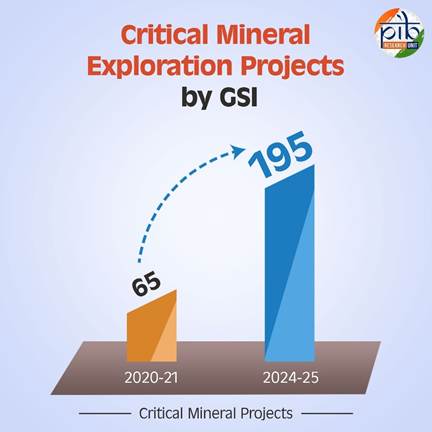
- 26 Jul 2025
In News:
The National Critical Mineral Mission (NCMM), launched by the Government of India in 2025, represents a strategic initiative to secure India's access to essential critical minerals, vital for clean energy, advanced electronics, defence, and emerging technologies. It aims to address India’s dependence on imports, strengthen domestic capacity, and build resilient supply chains.
What are Critical Minerals?
Critical minerals are those essential to economic development and national security, often marked by limited domestic availability and a high risk of supply disruption. These include lithium, cobalt, nickel, rare earth elements (REEs), graphite, and silicon, which are central to electric vehicles (EVs), solar panels, semiconductors, wind turbines, and defence applications.
Why NCMM? Strategic Context
- Energy Transition: India is 100% import-dependent for lithium, cobalt, and rare earths—crucial for EVs and energy storage.
- Tech Sovereignty: Strategic autonomy in AI, defence, and semiconductors depends on secure mineral access.
- Geopolitical Concerns: China controls 70–90% of global critical mineral processing. Diversifying supply chains is essential.
- Industrial Push: Schemes like PLI for EVs, electronics, and solar energy require a reliable mineral base.
- Climate Commitments: India aims to reduce emissions intensity by 45% (from 2005 levels) and reach net-zero by 2070.
Components of the National Critical Mineral Mission (NCMM)
Key Features of NCMM
1. Legal and Policy Framework
- Enacted under the Ministry of Mines in 2025.
- 30 critical minerals identified (24 inserted into Part D of the First Schedule of the MMDR Act, 1957).
- The Centre now has exclusive authority to auction mining leases for these minerals.
2. Domestic and Foreign Sourcing Targets (2024–2030)
|
Objective |
Target |
|
Domestic Exploration Projects |
1,200 |
|
Overseas Projects by PSUs |
26 |
|
Overseas Projects by Private Sector |
24 |
|
Recycling Incentive Scheme (in kilotons) |
400 |
|
Strategic Mineral Stockpile |
5 |
3. Capacity Building and Innovation
|
Objective |
Target |
|
Patents in Critical Mineral Tech |
1,000 |
|
Workforce Trained |
10,000 |
|
Processing Parks |
4 |
|
Centres of Excellence |
3 |
Sectoral Applications of Critical Minerals
- Solar Energy: Silicon, tellurium, indium, and gallium in photovoltaic cells; India’s solar capacity is 64 GW.
- Wind Energy: Neodymium and dysprosium in turbine magnets; target capacity: 140 GW by 2030.
- EVs: Lithium, nickel, cobalt in batteries; goal: 6–7 million EVs by 2024.
- Energy Storage: Lithium-ion battery storage systems; key for grid balancing and renewables.
Implementation Highlights
Exploration and Domestic Production
- 195 GSI projects launched in 2024–25, including 35 in Rajasthan.
- Over 100 mineral blocks identified for auction.
- Offshore exploration for polymetallic nodules (cobalt, REEs, nickel, manganese) underway.
- UNFC classification and MEMC Rules, 2015, guide the exploration methodology.
Asset Acquisition Abroad
- KABIL (Khanij Bidesh India Ltd):
- MoU with CAMYEN (Argentina) for lithium over 15,703 hectares.
- Ties with Australia for cobalt/lithium via Critical Mineral Office (CMO).
- Public–Private Partnership support via funding, MEA coordination, and guidelines for overseas investments.
Recycling and Circular Economy
- Incentives for mineral recovery from e-waste, fly ash, and tailings.
- Emphasis on building a formal recycling infrastructure.
- Current battery and electronics recycling sector is informal and lacks scale.
Processing and Midstream Infrastructure
- Development of dedicated Mineral Processing Parks.
- Encourage public–private partnerships and offer PLI-style incentives for refining technologies.
Challenges in India’s Critical Mineral Ecosystem
- High Import Dependence: 100% for lithium, cobalt, REEs.
- Underdeveloped Infrastructure: Lack of domestic refining, separation, and conversion capacity.
- Low Private Sector Participation: Technical and financial barriers deter participation.
- ESG Concerns: Mining zones often overlap with ecologically or tribally sensitive regions.
- Legal Bottlenecks: Environmental clearance delays due to weak ESG compliance.
- Informal Recycling Ecosystem: Fragmented, unregulated battery/e-waste recovery systems.
Strategic Roadmap Ahead
- Strengthen Exploration: Expand GSI capabilities; fund viability gap to attract investment.
- Diversify Global Sources: Engage in “friendshoring” with Australia, Argentina, U.S., etc.
- Build Midstream Capacity: Set up refining zones, mineral parks, and conversion units.
- Sustainable and Inclusive Mining: Implement ESG mandates and tribal welfare frameworks.
- Enhance Circular Economy: Provide tax breaks and subsidies for high-efficiency recovery systems.
Institutional Support
- IREL (India) Limited:
- Produces ilmenite, zircon, sillimanite, and rare earths.
- Operates Rare Earth Extraction Plant (Chatrapur, Odisha) and Refining Unit (Aluva, Kerala).
- Profitable PSU with ?14,625 million turnover (2021–22), including ?7,000 million exports.
Conclusion
India's National Critical Mineral Mission (NCMM) is pivotal for achieving strategic autonomy, industrial growth, and clean energy goals. By integrating domestic exploration, international partnerships, midstream processing, recycling, and regulatory reform, NCMM lays the foundation for a resilient and self-reliant mineral ecosystem. Its success is critical for India’s leadership in green technologies, manufacturing, and strategic geopolitics—making it a cornerstone initiative under Atmanirbhar Bharat and India's 21st-century industrial vision.
India–UK Comprehensive Economic and Trade Agreement (CETA)
- 26 Jul 2025
In News:
India and the United Kingdom signed the Comprehensive Economic and Trade Agreement (CETA) in July 2025, marking a landmark Free Trade Agreement (FTA) between India and a major developed economy. The agreement is part of the broader India–UK Vision 2035, aiming to strengthen bilateral ties across trade, technology, defence, climate, and education.
Key Features of CETA
1. Trade in Goods
- Zero-duty access for 99% of Indian exports to the UK, covering major sectors:
- Labour-intensive: textiles, leather, footwear, gems & jewellery, toys, marine products.
- High-growth: auto components, engineering goods, organic chemicals.
- Improved access for Indian agricultural products (tea, spices, coffee, fruits, meats) to UK’s $63.4 billion agri-market (dairy excluded).
2. Trade in Services
- First-of-its-kind comprehensive services commitment by the UK.
- Expands Indian access in: IT/ITeS, financial & legal services, architecture, education, telecom, consulting, and engineering.
3. Labour Mobility
- Liberalised visa norms for:
- Contractual Service Suppliers
- Intra-Corporate Transferees
- Independent Professionals (e.g. chefs, yoga instructors, musicians)
- Double Contribution Convention (DCC):
- Exempts Indian professionals and their employers from UK social security contributions for up to 3 years.
4. Inclusive Growth
- Benefits designed for MSMEs, women entrepreneurs, artisans, farmers, and startups.
- Provisions include:
- Dedicated SME contact points
- Digital trade facilitation
- Paperless customs
India–UK Vision 2035: 5 Strategic Pillars
1. Growth and Jobs
- Target: Double bilateral trade from USD 56 bn to USD 112 bn by 2030.
- Initiatives:
- New Bilateral Investment Treaty (BIT)
- UK–India Infrastructure Financing Bridge
- British International Investment (BII)
- Regulatory harmonisation in legal and financial services.
2. Technology and Innovation
- Focus Areas: AI, 6G, semiconductors, biotech, cybersecurity, biomaterials.
- Key Initiatives:
- Joint AI research centre
- India–UK Critical Minerals Guild
- Startup collaboration via incubators and biofoundries.
3. Defence and Security
- Launch of 10-Year Defence Industrial Roadmap: R&D in electric propulsion, underwater warfare, directed energy weapons.
- Deepening:
- 2+2 Ministerial Dialogue
- Military exercises, intelligence sharing
- Indian Ocean logistics cooperation
4. Climate and Clean Energy
- Areas of Collaboration: Offshore wind, small modular nuclear reactors (SMRs), carbon markets, blue carbon research.
- Joint commitment to:
- International Solar Alliance (ISA)
- One Sun One World One Grid (OSOWOG)
- Net Zero Innovation Partnership
5. Education and People-to-People Ties
- UK universities allowed to open campuses in India.
- Launch of dual degree programmes, mutual qualification recognition.
- Young Professionals Scheme for career mobility.
- Green Skills Partnership to bridge climate tech skill gaps.
Strategic Importance for India
|
Sector |
Impact |
|
Economy |
Enhances export potential, promotes Make in India, and attracts FDI. |
|
Employment |
Boosts jobs in textiles, IT, food processing, and engineering. |
|
Mobility |
Facilitates professional migration and global exposure. |
|
Technology |
Drives domestic innovation in AI, semiconductors, climate tech. |
|
Defence |
Supports self-reliance in high-tech military R&D. |
|
Climate Action |
Aids India’s Net Zero goals via access to green finance and clean energy tech. |
|
Global Positioning |
Strengthens India’s influence in WTO, UN, IMF, and other multilateral fora. |
Paika Rebellion (1817)
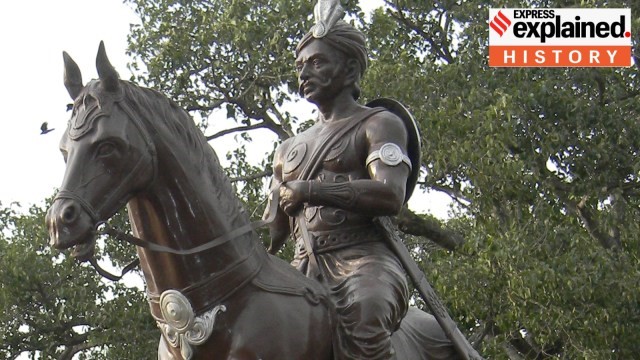
- 25 Jul 2025
In News:
The recent exclusion of the Paika Rebellion of 1817 from NCERT’s Class VIII history textbook triggered political backlash in Odisha. Former Chief Minister Naveen Patnaik termed the omission a “huge dishonour” to the Paika warriors, prompting NCERT to clarify that the topic would be included in the second volume of the textbook to be released later in 2025.
Who were the Paikas?
- The Paikas (literally "foot soldiers") were military retainers traditionally employed by the Gajapati kings of Odisha since the 16th century.
- In exchange for military service, they were granted hereditary rent-free lands (nish-kar jagirs), which they cultivated during peacetime.
- Under British rule, their privileges eroded, and they faced land dispossession, economic hardship, and social marginalisation.
Background to the Revolt
- In 1803, the British East India Company annexed Odisha. Colonel Harcourt marched from Madras to Cuttack, defeating feeble Maratha opposition.
- A deal with King Mukunda Deva II of Khurda promised ?1 lakh and four parganas (Lembai, Rahanga, Surai, Chabiskud) for safe passage, but the British defaulted.
- Jayee Rajguru, the king’s adviser, mobilised 2,000 Paikas to confront the British. Though part payment was made, the parganas were not returned.
- Rajguru was arrested and executed on 6 December 1806 for waging war against the British. The king was dethroned and exiled, and the Barunei Fort was demolished.
Causes of the Paika Rebellion
- Loss of Traditional Privileges:
- Confiscation of rent-free lands after British land settlements.
- End of royal patronage.
- Land Alienation & Tax Burden:
- Local Odia landowners were forced to sell land to Bengali absentee landlords.
- Revenue demands shifted to rupee payments, affecting marginal farmers and tribal communities.
- Salt Monopoly & Trade Restrictions: British control over salt trade, particularly after 1814, increased hardship for inland hill populations.
- Cultural and Political Suppression: The decline of local leadership and traditions under colonial authority contributed to growing dissent.
Course of the Rebellion (1817)
- In March 1817, approximately 400 Kondh tribal fighters from Ghumusar marched toward Khurda.
- They were joined by Bakshi Jagabandhu Bidyadhar, the former commander-in-chief of Khurda and ex-holder of the Rodanga estate.
- The rebels:
- Attacked the police station at Banpur
- Burned colonial buildings
- Looted the treasury
- Killed several British officials
- The rebellion spread across southern and central Odisha. Despite initial successes, the British suppressed the revolt.
- Jagabandhu evaded capture for years and surrendered in 1825 under negotiated terms.
Contemporary Significance and Political Debate
- The Paika Rebellion is widely regarded in Odisha as an early expression of anti-colonial resistance.
- In 2017, the Odisha government demanded that the uprising be recognised as the “First War of Independence”, predating the 1857 revolt.
- The Union Government, while not granting this status, acknowledged it as one of the early popular uprisings against colonial rule.
- National Recognition Efforts:
- In 2017, PM Narendra Modi felicitated over 200 descendants of Paika rebels.
- In 2019, President Ram Nath Kovind laid the foundation for a Paika Memorial at Barunei foothills, the rebellion’s epicentre.
- In 2024–25, the new BJP-led government in Odisha announced fast-tracked development of the Paika Academy and Memorial.
U.S. withdraws from UNESCO for the third time
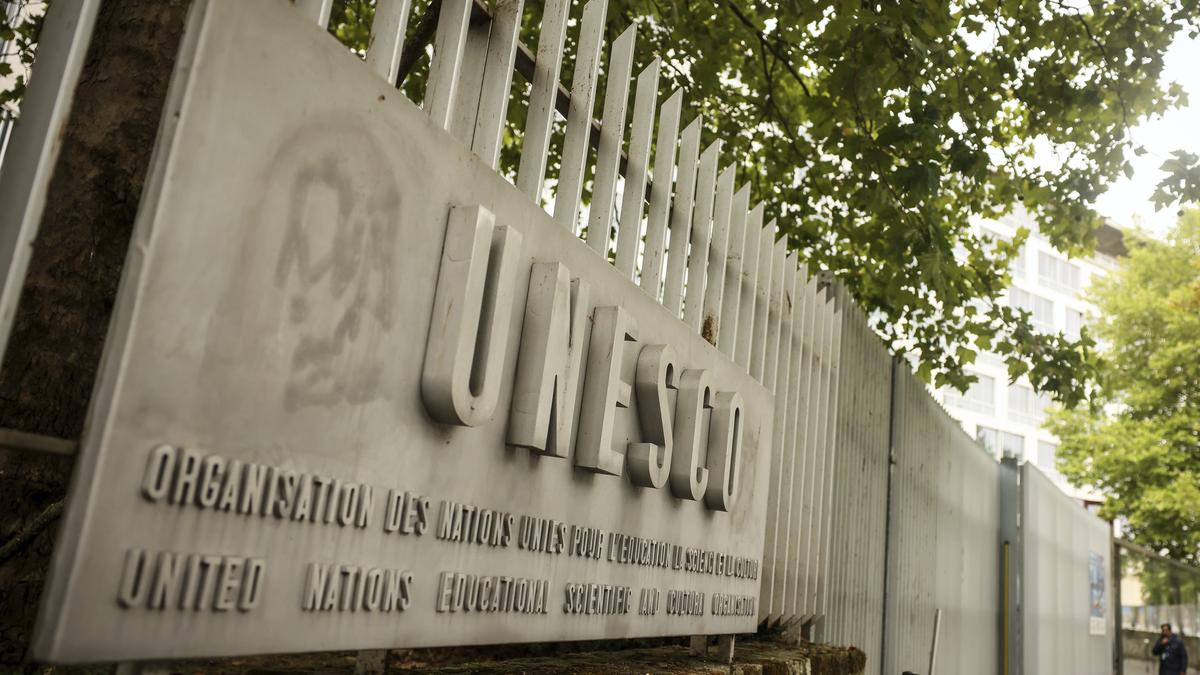
- 25 Jul 2025
In News:
In 2025, the United States announced its decision to withdraw from the UNESCO, citing perceived bias against Israel. This move comes just two years after rejoining the organization in 2023 and marks the third U.S. exit, and the second under the Trump administration.
What is UNESCO?
- Full Form: United Nations Educational, Scientific and Cultural Organization
- Founded: 16th November 1945
- Headquarters: Paris, France
- Membership: 194 Member States and 12 Associate Members
- India's Role: A founding member of UNESCO
Mandate and Key Functions
- Education: Promote inclusive and equitable lifelong learning (aligned with SDG 4)
- Culture: Safeguard tangible and intangible cultural heritage through tools like the World Heritage List
- Science: Advance climate science, AI ethics, and sustainable development
- Global Understanding: Foster mutual respect, peace, and international cooperation
Timeline of U.S. Exits from UNESCO
|
Year |
Administration |
Reason for Exit |
|
1984 |
Reagan |
Accusations of mismanagement and pro-Soviet bias |
|
2017 |
Trump (1st Term) |
Alleged anti-Israel bias after Palestine was accepted as a member in 2011 |
|
2025 |
Trump (2nd Term) |
Continued allegations of bias; exit scheduled by December 2026 |
- Rejoined: Under Biden Administration in 2023
Global Implications of U.S. Withdrawal
1. Financial Consequences
- The U.S. was a major contributor to UNESCO.
- Its exit leaves a budget deficit, affecting:
- Education initiatives
- Cultural heritage projects
- Climate and AI research
- Past example: U.S. and Israel froze funding after Palestine’s admission in 2011.
2. Geopolitical Rebalancing
- China’s influence may expand in UNESCO’s absence, potentially altering agendas and narratives.
- Risk of geopolitical polarization in multilateral agencies.
3. Weakening of Multilateralism
- Unpredictable U.S. engagement weakens global cooperation mechanisms.
- Undermines trust and support for UN agencies, especially in developing countries.
4. Impact on Science and Education
- Reduced backing for global programs in:
- STEM education for girls
- AI ethics frameworks
- Climate change awareness and mitigation
Implications for India
Opportunities
- Diplomatic leverage: Greater voice in shaping global agendas on education, AI, and heritage.
- Soft power expansion: Through advocacy for Indian culture and World Heritage nominations.
- South-South cooperation: Leadership in global education and sustainable development dialogue.
Challenges
- Funding constraints could affect:
- Ongoing Indian UNESCO projects (e.g., Nalanda, Sundarbans)
- Educational programs in rural/tribal regions
- Increased pressure on India to contribute more financially
- Rising Chinese influence could marginalize India’s strategic interests
Long-Billed Bush Warbler
- 25 Jul 2025
In News:
In a significant ornithological event, a team of birders has confirmed the first Indian sighting in 46 years of the elusive Long-billed Bush Warbler (Locustella major). The bird was observed in dense willow thickets at an altitude of over 3,200 metres in Suru Valley, Ladakh.
About Long-Billed Bush Warbler
- Scientific Name: Locustella major
- Common Name: Long-Billed Bush Warbler (formerly Long-billed Grasshopper Warbler)
- Type: Medium-sized, skulking songbird of the bush warbler group
- Size: Approximately 15–17 cm in length
- Plumage:
- Brownish-olive upperparts with fine streaking
- Pale underparts (whitish or buff)
- Both sexes appear similar
- Call: Produces an insect-like clicking sound used for territory marking and mate attraction
Distribution and Habitat
- Global Range:
- Limited distribution in the mountains of Central Asia
- Documented in India, Pakistan, China, and Tajikistan
- Preferred Habitat:
- Altitude: 2,400–3,600 metres
- Found on grassy slopes with bushes and weeds
- Upland terraced cultivation and forest edge clearings
- Often observed among Rumex, sea buckthorn, and Ribes gooseberry shrubs near spruce forests
Conservation Status
- IUCN Red List: Near Threatened (NT)
- Reasons for decline include habitat loss, especially due to conversion of bushland into agricultural fields.
Significance of the 2025 Sighting
- The last confirmed Indian record was in 1979 near Sankoo in Kargil, by researchers from Southampton University.
- Historically, the species was relatively common in Dras and Suru valleys until the early 20th century.
- The recent sighting aligns with records from nearby Gilgit-Baltistan (2022–2025), where the species has been increasingly documented at similar altitudes (3,000–3,100 m).
Preah Vihear Temple Dispute
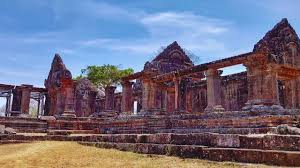
- 25 Jul 2025
In News:
Tensions between Thailand and Cambodia have sharply escalated in recent months, marked by armed clashes, airstrikes, and diplomatic fallout, all centering around the Preah Vihear Temple—a centuries-old Hindu monument of immense cultural and geopolitical significance.
About Preah Vihear Temple
- Location: Preah Vihear Province, northern Cambodia, atop a cliff in the Dangrek Mountain range, near the Cambodia–Thailand border.
- Religious Affiliation: Hindu temple dedicated to Lord Shiva.
- Historical Background:
- Constructed during the Khmer Empire, primarily in the 11th and 12th centuries.
- Key patrons: King Suryavarman I (1002–1050) and King Suryavarman II (1113–1150).
- UNESCO World Heritage Site: Inscribed in 2008 for its exceptional architectural and historical value.
Architectural Features
- Exemplifies Khmer temple architecture with a linear arrangement of sanctuaries linked by pavements and staircases over an 800-metre-long axis.
- Contains over five gopuras (monumental gateways) connected by a raised path and tiered platforms.
- Mixture of stone and wooden roofing, though many structures are partially in ruins.
Territorial Dispute Overview
- Historical Basis:
- Dispute stems from differing interpretations of a 1907 French map, which placed the temple inside Cambodian territory.
- Thailand disputes the map, arguing lack of formal acceptance.
- International Court of Justice (ICJ) Rulings:
- 1962: ICJ ruled the temple belongs to Cambodia, citing Thailand’s implicit acceptance of the 1907 map.
- Thailand was ordered to withdraw troops and return artifacts taken since 1954.
- 2013 (Reaffirmation): ICJ clarified that surrounding areas—particularly a 4.6 sq. km. disputed zone—also belong to Cambodia.
Major Flashpoints in the Conflict
- 2008: Cambodia registers Preah Vihear as a UNESCO World Heritage Site, triggering nationalist backlash in Thailand.
- 2008–2011: Border skirmishes escalate, culminating in a 2011 clash that killed at least 15 people.
- 2025 Escalation:
- Renewed violence erupted in July 2025, after a series of provocations:
- May 2025: Cambodian soldier killed.
- July 2025: Two Thai soldiers injured in landmine blasts.
- July 24, 2025: Armed conflict intensifies—Thai airstrikes target Cambodian positions near the temple.
- Casualties: At least 9 civilians killed, 14 injured in Thai provinces bordering Cambodia.
- Both nations expelled ambassadors and blamed each other for violations of sovereignty.
- Renewed violence erupted in July 2025, after a series of provocations:
Significance of the Dispute
- Cultural: Preah Vihear is a sacred site and national symbol for both nations.
- Strategic: Its location atop a cliff offers military advantage and control over surrounding terrain.
- Diplomatic: The temple remains a fault line in bilateral ties, with unresolved territorial claims despite multiple ICJ verdicts.
Palna Scheme
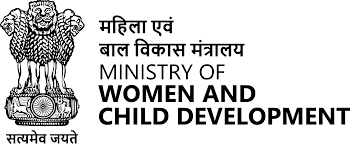
- 25 Jul 2025
In News
Launched by the Ministry of Women and Child Development (MoWCD) under the Samarthya vertical of Umbrella Mission Shakti, the Palna Scheme aims to provide safe, accessible, and quality day care (crèche) facilities for children aged 6 months to 6 years across all States and Union Territories, effective from 1st April 2022.
Key Features:
- Objective: To support working mothers by providing crèche services ensuring:
- Safety and well-being of children
- Nutritional support
- Early childhood care and cognitive development
- Health check-ups, growth monitoring, and immunization
- Target Beneficiaries: All children aged 6 months to 6 years. Services are irrespective of mothers' employment status, covering both organized and unorganized sectors.
- Types of Crèches:
- Standalone Crèches
- Anganwadi-cum-Crèches (AWCCs)
Anganwadi-cum-Crèche (AWCC) Model
- Utilizes existing Anganwadi Centres, the world’s largest public childcare infrastructure, to provide full-day childcare services.
- Ensures last-mile delivery of services in a safe and secure environment.
- Supports women’s workforce participation by relieving unpaid childcare burden.
Timings & Flexibility
- Crèches to operate for 26 days/month and 7.5 hours/day, with timings adapted to local needs.
- States/UTs may adjust timings under Standard Operating Procedures based on community work patterns.
Funding Pattern
|
Category |
Centre:State Funding Ratio |
|
General States |
60:40 |
|
North Eastern & Special Category States |
90:10 |
|
UTs with Legislature |
60:40 |
|
UTs without Legislature |
100% Central Assistance |
Integrated Services Offered
- Day care and sleeping facilities
- Early stimulation for children below 3 years
- Pre-school education for 3–6 years
- Supplementary nutrition (locally sourced)
- Growth monitoring, health check-ups & immunization
Implementation Status (As of July 2025)
- Total Envisioned AWCCs (FY 2022–26): 17,000
- AWCCs Approved by MoWCD (as of July 2025): 14,599
- Implemented based on proposals from States/UTs with cost-sharing as per applicable funding norms.
Significance
- Addresses the rising need for formal childcare due to:
- Increasing nuclear families
- Greater women’s participation in the workforce
- Migration, urbanization, and limited informal support structures
- Aligns with SDG 8 (Decent Work and Economic Growth) by formalizing care work and supporting inclusive economic participation.
Manual Scavenging
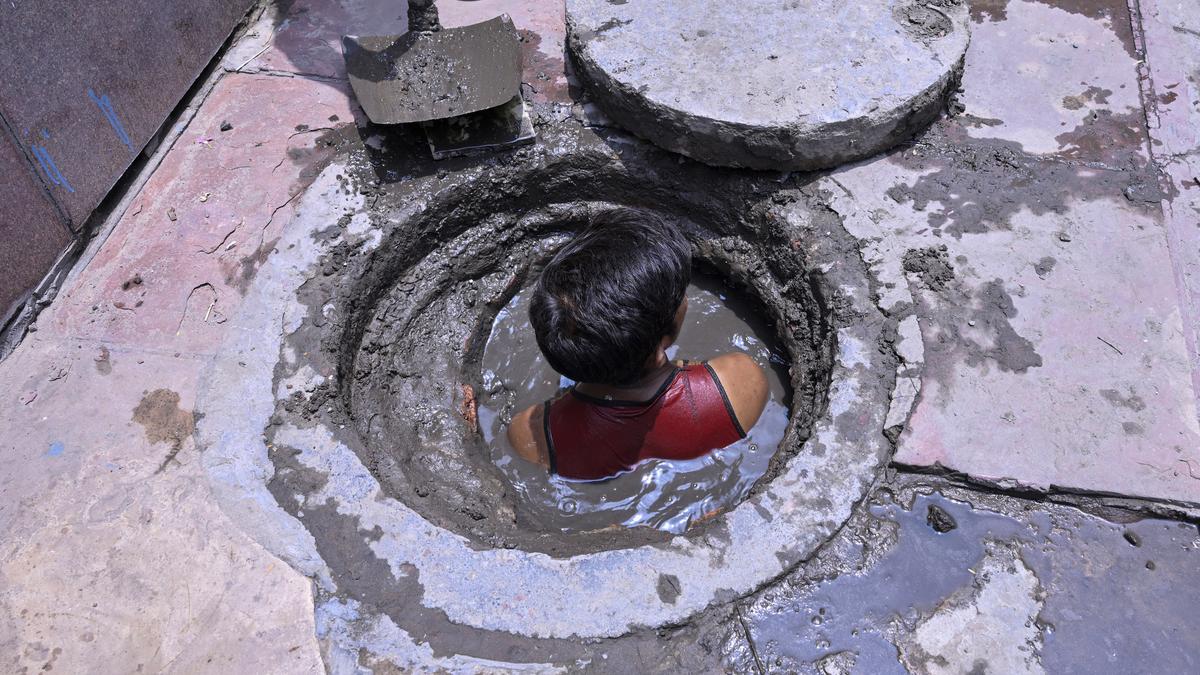
- 24 Jul 2025
In News:
A recent social audit conducted by the Ministry of Social Justice and Empowerment has exposed alarming lapses in the safety and legal safeguards meant to protect sanitation workers. The study, which examined 54 sewer-related deaths across 17 districts in eight States and Union Territories during 2022 and 2023, found that over 90% of the workers who died had no access to basic safety gear or mechanised equipment. Despite legal bans and policy interventions, manual scavenging and hazardous sewer cleaning continue, often resulting in fatalities, primarily among marginalized communities.
What is Manual Scavenging?
Manual scavenging involves the manual handling of human excreta from dry latrines, open drains, sewers, and septic tanks. Although officially prohibited under the 2013 Act, the practice continues under different forms, particularly through hazardous sewer and septic tank cleaning.
Key Findings from the Social Audit (2022–2023)
- 150 deaths from hazardous cleaning were recorded nationally during the two-year period.
- In 49 of the 54 deaths audited, no safety equipment was provided.
- In only five cases, the deceased had gloves; just one worker had both gloves and gumboots.
- No mechanised equipment was available in 47 cases; training was provided in only one instance.
- Informed consent was missing in 27 cases; in the 18 cases where consent was obtained, no counselling on risks was given.
- Most workers were individually contracted and not hired through government channels, evading institutional accountability.
- Post-death awareness drives were conducted in only seven locations, and even these were only partially executed.
Constitutional and Legal Safeguards
Constitutional Provisions:
- Article 21: Ensures the right to life with dignity, including safe working conditions.
- Article 23: Prohibits forced labour, applicable when workers are compelled into hazardous tasks.
- Article 42: Calls for humane working conditions and maternity relief.
Legal Framework:
- Prohibition of Employment as Manual Scavengers and their Rehabilitation Act, 2013:
- Bans manual scavenging.
- Mandates rehabilitation of identified workers.
- Supreme Court Judgment (2014 – Safai Karamchari Andolan v. Union of India):
- Ordered ?10 lakh compensation for each sewer/septic tank death.
- Held the State responsible for implementation failures.
Government Initiatives
NAMASTE Scheme (2023)
The National Action Plan for Mechanised Sanitation Ecosystem (NAMASTE) aims to eliminate hazardous cleaning practices.
- 84,902 workers have been identified across 36 States/UTs.
- Around 50% of them have been provided with PPE kits.
- In Odisha, 100% of identified workers (1,295) have received PPE kits, supported by the Garima Scheme.
- ?20 crore in capital subsidies distributed to 707 sanitation workers.
- 1,000 awareness workshops conducted.
- The scheme has also identified 37,800 waste pickers for support.
Other Key Initiatives:
- Swachh Bharat Abhiyan: Aims to reduce dependence on manual scavenging through sanitation infrastructure.
- Rashtriya Garima Abhiyaan: Campaign to eliminate manual scavenging and ensure rehabilitation.
- Bandicoot Robot: India’s first manhole-cleaning robot, developed in Kerala, which became the first fully robotised state for manhole cleaning in 2023.
Financial Inclusion Index (FI-Index)
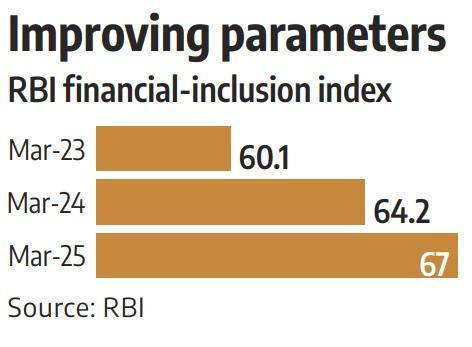
- 24 Jul 2025
In News:
The Reserve Bank of India’s Financial Inclusion Index (FI-Index) saw a 4.3% rise in FY2024-25, climbing from 64.2 in March 2024 to 67 in March 2025. This growth signals India’s ongoing success in expanding access to financial services, particularly in underserved regions, and enhancing the depth and quality of financial inclusion.
Understanding Financial Inclusion
- Financial inclusion refers to ensuring that individuals and businesses have accessible, affordable, and appropriate financial services such as banking, insurance, pensions, and investments. These services should be delivered responsibly and sustainably, supporting long-term economic empowerment.
What is the Financial Inclusion Index (FI-Index)?
- Developed by the RBI, the FI-Index offers a comprehensive measure of financial inclusion in India. It was formulated in consultation with the government and relevant financial sector regulators and captures progress across diverse financial domains—including banking, insurance, postal services, investments, and pensions.
- The Index is expressed as a single score between 0 and 100, where 0 denotes complete exclusion and 100 indicates full financial inclusion.
Components of the FI-Index
- Access (35% weight): Availability of financial services to the public.
- Usage (45% weight): Frequency and extent of usage of financial services.
- Quality (20% weight): Incorporates factors such as financial literacy, consumer protection, and equality in service delivery.
Key Insights from FY2024–25
- The FI-Index rose to 67 in March 2025, indicating broader and deeper financial engagement.
- All three sub-indices—access, usage, and quality—showed improvement.
- Notably, the rise was primarily driven by enhanced usage and service quality, reflecting the success of financial literacy campaigns and improved consumer trust in financial systems.
Importance of Financial Inclusion
Financial inclusion is not just an economic tool—it is a developmental imperative. It:
- Fuels entrepreneurship and employment generation.
- Advances gender empowerment, especially among women-led households.
- Helps in poverty alleviation and the resilience of vulnerable groups against financial and climate-related shocks.
- Supports at least seven of the United Nations Sustainable Development Goals (SDGs), including reducing inequalities and promoting inclusive economic growth.
Major Government Initiatives Driving Financial Inclusion
India's focused efforts have resulted in widespread access to formal financial services:
- Pradhan Mantri Jan Dhan Yojana (PMJDY): Over 54.58 crore bank accounts opened; deposits crossed ?2.46 lakh crore by January 2025.
- Atal Pension Yojana (APY): Enrolments surged to 7.33 crore, with 89.95 lakh new subscribers in FY25 alone.
- Pradhan Mantri Jeevan Jyoti Bima Yojana (PMJJBY): Covered 22.52 crore people, disbursing over ?17,600 crore for 8.8 lakh claims.
- Pradhan Mantri Suraksha Bima Yojana (PMSBY): Provided insurance to 49.12 crore individuals, settling claims worth ?2,994.75 crore.
- Pradhan Mantri Mudra Yojana (PMMY): Sanctioned loans worth ?32.36 lakh crore across 51.41 crore accounts; 68% to women and 50% to SC/ST/OBC beneficiaries.
- Stand-Up India Scheme: Loans worth ?53,609 crore sanctioned to 2.36 lakh entrepreneurs, promoting SC/ST and women entrepreneurship.
MiG-21 Fighter Jets
- 24 Jul 2025
In News:
- The Indian Air Force (IAF) is set to retire its final two squadrons of the iconic MiG-21 Bison fighter jets in September 2025, marking the end of an era that spanned over six decades.
- First inducted in 1963, the MiG-21 played a pivotal role in shaping India's aerial combat capabilities and remains a symbol of India's early steps toward defence self-reliance.
MiG-21: An Overview
- Origin: Designed by the Mikoyan-Gurevich Design Bureau of the Soviet Union in the 1950s.
- Type: Single-engine, supersonic jet fighter.
- Speed: Capable of speeds over Mach 2.0, making it one of the fastest jets of its time.
- Induction in India: Entered IAF service in 1963; licensed production began in the 1960s by Hindustan Aeronautics Limited (HAL).
- Significance: India’s first combat aircraft of non-Western origin and a key asset for air superiority during the Cold War and beyond.
Operational Legacy
The MiG-21 became the backbone of the IAF from the 1970s until the early 2000s, remaining in service even after the induction of more advanced aircraft like the Su-30MKI.
Wars and Combat Contributions
- 1965 & 1971 Indo-Pak Wars: Played a crucial role in establishing air superiority.
- During the 1971 war, MiG-21s conducted multiple successful bombing missions, including attacks on Pakistani airbases, contributing significantly to India’s decisive victory and the creation of Bangladesh.
- The aircraft famously outmatched Pakistan’s F-104 Starfighters in dogfights.
Strengths
- All-weather operations capability.
- Versatility in roles: air-to-air combat, ground attacks, and reconnaissance.
- Compatibility with a variety of air-to-ground and air-to-air weapons.
Limitations and Controversy
Despite its legendary status, the MiG-21's later years were marked by increasing technical limitations and a poor safety record:
- Nicknamed "Flying Coffin" due to over 400 crashes since the 1970s.
- Resulted in the deaths of over 200 pilots and 50 civilians.
- Upgraded variants like the MiG-21 Bison included radar and avionics improvements but could not overcome structural and safety limitations.
- Retirement was delayed multiple times due to shortages in the IAF’s squadron strength.
Retirement and Replacement
- The last two MiG-21 Bison squadrons will be phased out by September 2025.
- India had produced over 600 MiG-21s under license.
- Replacement underway with indigenously developed Tejas Mk-1A fighter jets, part of India’s push for self-reliance under Atmanirbhar Bharat.
- The IAF currently operates 29 squadrons—well below the sanctioned strength of 42.5 squadrons.
Fungus-Resistant Pineapple
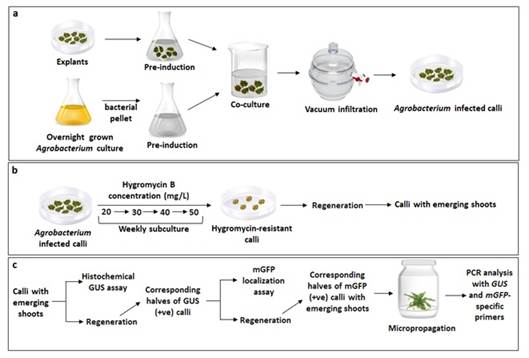
- 24 Jul 2025
In News:
- Pineapple (Ananas comosus L. Merr.), the most economically significant fruit of the Bromeliaceae family, plays a crucial role in nutrition and agriculture across tropical regions.
- In India, pineapple cultivation contributes significantly to rural livelihoods, particularly in northeastern and southern states. However, the productivity of this high-value fruit is severely impacted by Fusariosis, a destructive fungal disease caused by Fusarium moniliforme.
- A recent breakthrough by Indian scientists promises a potential game-changer in combating this challenge using indigenous genetic innovation.
Fusariosis
- Fusariosis is a devastating fungal infection that warps the stem, blackens the leaves, and rots the fruit internally, leading to heavy crop losses.
- Traditional breeding methods have struggled to provide effective resistance due to the rapid evolution of fungal pathogens. For farmers, this translates into unreliable harvests and financial instability.
The Biotechnological Solution: AcSERK3 Gene Overexpression
Researchers from the Bose Institute, an autonomous body under the Department of Science and Technology (DST), have successfully identified and overexpressed a gene in pineapple that significantly enhances resistance to Fusariosis.
- The gene, AcSERK3 (Somatic Embryogenesis Receptor Kinase 3), is part of the pineapple’s natural genome.
- It is known to regulate somatic embryogenesis and strengthen plant responses to biotic and abiotic stress.
- By genetically overexpressing this gene in pineapple plants, the researchers were able to trigger enhanced internal defence mechanisms.
- The transgenic lines exhibited increased production of stress-associated metabolites and antioxidant enzyme activity, enabling them to survive fungal attacks that severely damaged wild-type plants.
This is the first documented instance of overexpression of an indigenous pineapple gene to impart fungal disease tolerance while simultaneously improving regenerative capacity.
Significance of the Research
- The study, published in In Vitro Cellular & Developmental Biology – Plants, lays the foundation for developing multi-fungal tolerant pineapple varieties.
- These genetically enhanced lines are not dependent on foreign genes, thereby addressing biosafety concerns.
- Field trials, if successful, could lead to the commercial deployment of these varieties using conventional propagation methods like slips and suckers.
- This offers a sustainable, farmer-friendly solution, especially for smallholder pineapple growers in India.
Pineapple Cultivation in India: Key Facts
- Climatic Conditions: Grows well in 15–30°C temperature range and 600–2500 mm annual rainfall (optimum: 1000–1500 mm).
- Soil: Requires well-drained soils; intolerant to waterlogging.
- Tolerant to Drought: Possesses water-storing tissues making it suitable for rainfed cultivation.
- Cultivation Pattern: Can be grown as a monocrop or intercropped with coconut.
- Major Producing States: Assam, Meghalaya, Tripura, Manipur, West Bengal, Kerala, Karnataka, and Goa.
- Global Producers: Thailand, Philippines, Brazil, China, Nigeria, Mexico, Indonesia, Colombia, and the USA.
Stablecoins
- 24 Jul 2025
In News:
In the evolving landscape of digital finance, stablecoins have emerged as a promising innovation. Unlike volatile cryptocurrencies such as Bitcoin, stablecoins are designed to maintain a consistent value by pegging their worth to stable assets like fiat currencies or commodities. Recent legislative and technological developments, particularly in the United States, indicate growing global interest in integrating stablecoins into everyday financial systems.
What are Stablecoins?
Stablecoins are a type of cryptocurrency whose value is anchored to an external asset, commonly a fiat currency like the US dollar, or commodities such as gold. This pegging mechanism aims to minimize price volatility, making them more suitable for routine transactions.
There are three primary categories of stablecoins:
- Fiat-collateralized: Backed by actual reserves of fiat currency.
- Crypto-collateralized: Secured using other cryptocurrencies as collateral.
- Algorithmic (non-collateralized): Use smart contracts to automatically manage the coin’s supply based on demand.
Although designed for stability, these digital assets still carry some risks, especially if reserve management is opaque or unregulated.
Technological Foundation
Stablecoins, like other cryptocurrencies, are built on blockchain technology—a decentralized, distributed ledger system that records transactions in a secure, transparent manner. Blockchains operate through consensus mechanisms without needing a central authority, making stablecoins capable of direct peer-to-peer transactions without traditional banking intermediaries.
Recent Policy Development: The GENIUS Act
In a landmark move, the GENIUS Act (Generating Emergency National Income Using Stablecoins) was recently signed into law by the US President. It provides a regulatory framework specifically for US dollar-pegged stablecoins like USDC (by Circle) and USDT (by Tether). This legislative support is expected to accelerate the mainstream adoption of stablecoins, especially in cross-border payments.
Applications of Stablecoins
- Remittances and Cross-Border Transfers:
- Traditional remittance services like Western Union or MoneyGram charge high fees and delays.
- Stablecoins offer instant, low-cost transactions, benefiting especially those in countries facing hyperinflation or capital controls.
- Companies can also pay overseas workers in stablecoins, bypassing complex financial systems and exchange rate risks.
- E-Commerce and Retail:
- Online merchants can reduce reliance on credit card networks, which collected over $187 billion in fees in the US in 2023 alone.
- Stablecoins eliminate intermediaries, reducing transaction fees and improving profit margins.
- Enterprise and Supply Chain Payments:
- Businesses can benefit from faster and cheaper cross-border payments.
- Chinese conglomerate JD.com suggests stablecoins could cut transaction costs by 90% and reduce settlement time from days to seconds.
- Custom Stablecoins by Corporations:
- Giants like Amazon, Walmart, and JD.com are exploring the issuance of proprietary stablecoins to support in-house payment systems, customer loyalty programs, and even financial services.
- This could potentially shift customer deposits away from traditional banks, affecting their lending capacity.
- Integration with Artificial Intelligence: Emerging AI agents may autonomously execute and manage stablecoin-based transactions, particularly in business-to-business ecosystems, improving operational efficiency.
Opportunities and Challenges
Advantages:
- Faster, cheaper international payments
- Improved financial inclusion
- Enhanced efficiency in e-commerce and global business operations
Concerns:
- Regulatory uncertainty, especially across jurisdictions
- Security risks, including fraud and hacking
- Potential disruption to traditional banking systems
SASCI Scheme
- 23 Jul 2025
In News:
The Ministry of Tourism has issued operational guidelines for the SASCI Scheme – Special Assistance to States for Capital Investment – Development of Iconic Tourist Centres to Global Scale – aiming to comprehensively upgrade iconic tourist destinations across India.
About the SASCI Scheme
- Objective: To develop iconic tourist centres into world-class destinations, ensuring global branding and promotion, and enhancing the overall tourist experience.
- Ministry in Charge: Ministry of Tourism, Government of India.
- Nature of Assistance: Central Government provides financial support to State Governments for selected tourism projects under capital investment mode.
Key Features of the Scheme
- Integrated Development:
- Creation of end-to-end tourist experiences, including infrastructure, amenities, and accessibility.
- Strengthening all points of the tourist value chain – from entry to exit.
- Proposal-Based Implementation:
- Projects are selected based on proposals submitted by State Governments.
- These proposals are evaluated based on several prescribed parameters.
- Evaluation Parameters Include:
- Connectivity to the site
- Existing tourism ecosystem
- Carrying capacity of the site
- Sustainability measures (environmental, social)
- Operation and maintenance mechanisms
- Project impact and value creation
- Tourism marketing strategies
- Design & Sustainability:
- Projects to leverage high-quality expertise for planning, design, and execution.
- Emphasis on sustainable development and maintenance of tourist centres.
Implementation Timeline & Funding
- Timeline:
- Projects to be completed within a maximum of 2 years from sanction.
- Deadline for Central funding: 31st March 2026.
- Execution Responsibility: Entirely with the respective State Governments under the guidance of the Ministry of Tourism.
Promotional Strategy
- The Ministry promotes these destinations through:
- International and domestic events
- Social media campaigns
- Dedicated tourism websites
- Other promotional and branding platforms
Ambrosia Beetle
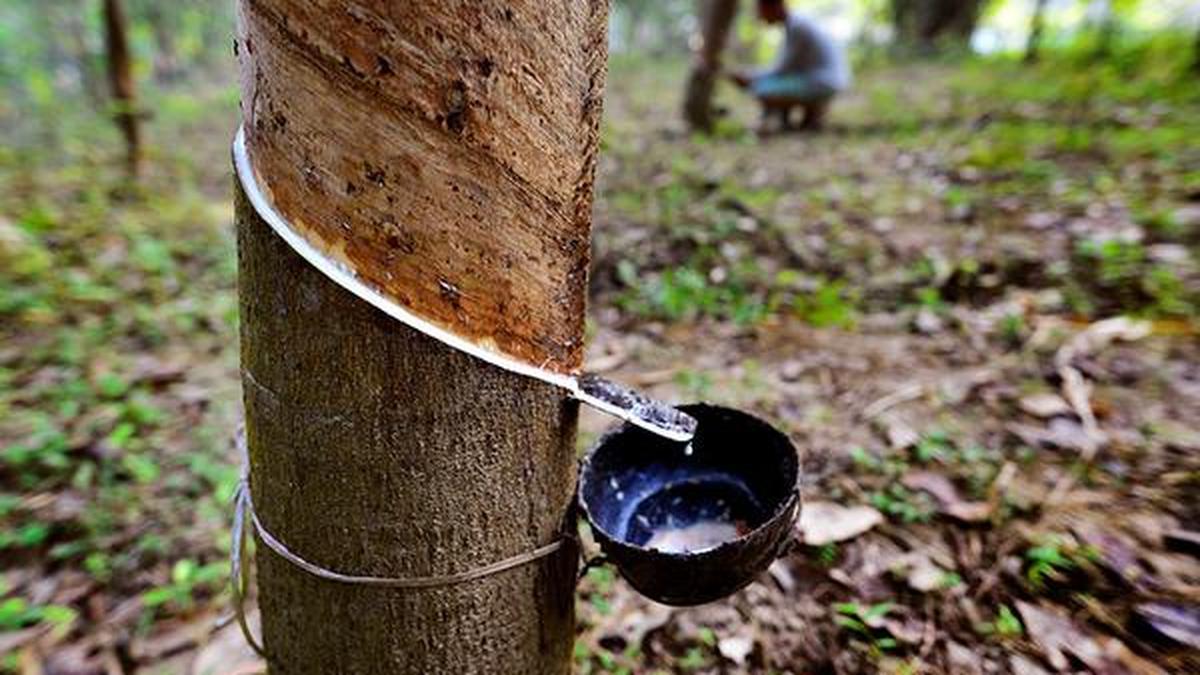
- 23 Jul 2025
In News:
Rubber plantations in Kerala, the heart of India’s natural rubber production, are under significant threat due to an invasive insect-fungal association. A mutualistic relationship between the ambrosia beetle (Euplatypus parallelus) and two fungal species (Fusarium ambrosia and Fusarium solani) has caused widespread tree damage, including leaf fall, trunk drying, and reduction in latex yield. This development poses a serious risk to India's rubber economy, biodiversity, and public health.
Key Highlights:
Ambrosia Beetle
- Origin: Native to Central and South America.
- First reported in India: In 2012, from cashew trees in Ponda, Goa.
- Current host: Rubber trees in Kerala, especially in Irrity-Kannur region.
Fungal Partners
- Fusarium ambrosia
- Fusarium solani — first time reported in association with adult ambrosia beetles in India.
Mutualistic Relationship
- The beetles do not feed on wood, but carry fungi into tunnels (galleries) bored into the tree bark.
- The fungi feed on wood, releasing enzymes that degrade plant tissue.
- Beetles and their larvae then feed on the nutrient-rich fungal mycelia.
- This association causes systemic infections in trees, often leading to their death.
Impact on Rubber Trees
- Weakens wood structure
- Causes severe leaf fall and drying of trunks
- Blocks xylem vessels, reducing water transport
- Leads to reduced latex production
- Long recovery time and high tree mortality
- The infection is hard to treat, as fungi lodge deep in plant tissues where fungicides and insecticides are ineffective.
Wider Implications
Scientific Concerns
- Fungi like Fusarium solani can evolve to associate with other beetles, expanding the range of infection to cashew, coconut, coffee, mango, and teak.
- These fungi can spread through soil or be carried by insect vectors, making containment difficult.
Health Hazards
- Fusarium species are opportunistic pathogens in humans.
- Workers in plantations may be exposed to these fungi, especially those with compromised immunity.
India’s Rubber Sector at Risk
- India is the 6th largest producer of rubber globally.
- Kerala accounts for 90% of national production and 72% of cultivation area.
- The economic stakes are high, as the beetle-fungi threat endangers not only latex yields but also the livelihoods of thousands of smallholder farmers.
Response Measures and Strategies
Current Management Practices
- Use of antifungal agents
- Pruning or burning infected parts
- Installation of ambrosia beetle traps
- Chipping infected wood to prevent spread
Challenges
- No mycangia (fungal sacs) found in beetles in India — raises questions on fungal transmission mechanisms.
- Soil- and insect-mediated spread of fungi makes conventional phytosanitary measures ineffective for broadleaf trees like rubber.
Suggested Solutions
- Genetically modified (GM) rubber plants to resist fungal infection (debated).
- Use of antagonistic fungi or microbial consortia inside plants to outcompete pathogens.
- Location-specific strategies based on geography and host tree characteristics.
- Greater collaboration between researchers and policymakers to monitor and contain the threat.
Winter Fog Experiment (WiFEX)
- 23 Jul 2025
In News:
The Winter Fog Experiment (WiFEX) has completed ten successful years since its launch in 2015. Initiated at the Indira Gandhi International Airport (IGIA), New Delhi, WiFEX has emerged as a pioneering long-term scientific initiative aimed at understanding and mitigating the impact of dense winter fog over the Indo-Gangetic Plain (IGP) — one of the most fog-prone regions in the world.
What is WiFEX?
- Launched in Winter 2015 at IGIA, New Delhi.
- Led by the Indian Institute of Tropical Meteorology (IITM) under the Ministry of Earth Sciences (MoES).
- Supported by:
- India Meteorological Department (IMD)
- National Centre for Medium Range Weather Forecasting (NCMRWF).
- One of the world’s few open-field long-term experiments exclusively dedicated to studying winter fog.
Objectives of WiFEX
- To develop accurate now-casting (up to 6 hours) and forecasting systems for fog events over North India.
- To reduce the adverse impact of fog on:
- Aviation (flight delays, diversions, safety).
- Surface transport (road and rail accidents).
- Economy and public safety.
How it was Conducted
Observational Framework
WiFEX deployed cutting-edge scientific equipment, including:
- Micrometeorology towers
- Ceilometers
- High-frequency sensors
- Radiometers
- Wind profilers
These were installed at multiple locations including:
- IGIA, Delhi
- Jewar Airport, Noida
- Hisar, Haryana
Key Parameters Studied
- Atmospheric temperature stratification
- Relative humidity and soil heat flux
- Wind speed and turbulence
- Aerosol concentration
- Urban heat island effects
- Land-use changes
This comprehensive data helped scientists decode how dense fog forms, persists, and disperses.
Major Achievements of WiFEX
High-Resolution Forecasting Model
- A 3-km resolution probabilistic fog prediction model was developed.
- Achieved over 85% accuracy in forecasting very dense fog (visibility <200 meters).
- Provides insights on:
- Onset and dissipation timing
- Fog density
- Duration of fog events
Operational Impact
- Significantly reduced flight diversions and delays at IGIA.
- Enhanced airport safety and efficiency in fog conditions.
- Helped airlines and transport authorities activate timely contingency plans.
Scientific Contributions
- Showcased how air pollution, aerosols, urbanization, and land-use changes influence fog behavior.
- Facilitated improvements in early warning systems for North India.
- Informed urban planning and air quality policies for fog-prone areas.
United Nations Educational, Scientific and Cultural Organization (UNESCO)
- 23 Jul 2025
In News:
In a significant development, the United States has announced its decision to withdraw from UNESCO (United Nations Educational, Scientific and Cultural Organization) by December 2026, citing what it perceives as the agency’s anti-Israel bias and its recognition of the State of Palestine as a full member. This marks the third withdrawal of the U.S. from UNESCO and the second under President Donald Trump’s leadership, having previously exited in 2018 and rejoined in 2023 under the Biden administration.
Reasons for U.S. Withdrawal
According to the U.S. State Department, the decision stems from:
- UNESCO’s admission of the State of Palestine as a member state, which contradicts official U.S. policy.
- Allegations that UNESCO promotes divisive social and cultural causes.
- Concerns about the proliferation of anti-Israel rhetoric within the organization.
About UNESCO
Founding and Mandate
- Founded: 16 November 1945 (Constitution in force from 1946).
- Headquarters: Paris, France.
- Parent Body: United Nations Economic and Social Council (ECOSOC).
- Membership: 194 member states and 12 associate members.
- Origin: Born out of post–World War II efforts to foster peace through education, science, and culture.
Objectives
UNESCO aims to build global peace and security by:
- Promoting international cooperation in education, science, culture, and communication.
- Supporting literacy, educational access, and free universal education.
- Acting as a clearinghouse of knowledge, especially in global South nations.
Focus Areas
UNESCO operates in five major sectors:
- Education
- Natural Sciences
- Social and Human Sciences
- Culture
- Communication and Information
Key Functions and Initiatives
Flagship Initiatives
- World Heritage Convention (1972): Protects cultural and natural sites of outstanding universal value.
- Man and the Biosphere Programme (1971): Promotes sustainable development through biosphere reserves.
- Convention for Safeguarding Intangible Cultural Heritage (2003): Preserves oral traditions, performing arts, and rituals.
- Global Education Coalition (2020): Formed during COVID-19 to ensure education continuity.
- Recommendation on the Ethics of Artificial Intelligence (2021): Sets global standards for ethical AI development.
Important Publications
- Global Education Monitoring Report
- World Water Development Report
- World Trends in Freedom of Expression and Media Development
Strategic Importance of UNESCO
- Acts as a platform for intercultural dialogue and peacebuilding.
- Enhances scientific cooperation for issues like climate change and disaster preparedness.
- Supports freedom of expression and combats misinformation globally.
- Promotes equity in global education and digital access.
- Plays a key role in setting ethical standards in science and technology.
U.S. and UNESCO: A Tumultuous Relationship
- The U.S. has historically had a strained relationship with UNESCO:
- 1984: First withdrawal under Ronald Reagan, citing mismanagement and politicization.
- 2002: Rejoined under George W. Bush.
- 2011: Stopped funding after UNESCO admitted Palestine as a member.
- 2018: Withdrew under Donald Trump.
- 2023: Rejoined under Joe Biden.
- 2026: Set to withdraw again.
Implications of U.S. Withdrawal
- Financial Impact: The U.S. has historically contributed around 22% of UNESCO’s budget.
- Geopolitical Signal: Reflects a broader American skepticism towards multilateral institutions.
- Operational Effect: May hamper UNESCO’s work, especially in politically sensitive or conflict regions.
- Diplomatic Fallout: Could weaken the U.S.'s soft power and global cultural influence.
Resignation of Vice-President of India
- 23 Jul 2025
In News:
Vice-President of India, Jagdeep Dhankhar, resigned from office on health grounds on July 2025, invoking Article 67(a) of the Constitution. This created a rare mid-term vacancy in the Vice-President’s office, necessitating immediate action by the Election Commission of India (ECI) to conduct fresh elections.
Constitutional Provisions and Duties of the Vice-President
Articles Related to Vice-President:
- Article 63: Provides for the post of Vice-President.
- Article 64: Vice-President acts as ex-officio Chairman of Rajya Sabha.
- Article 65: Vice-President acts as President in case of a vacancy in the office of the President.
- Article 66: Deals with election of the Vice-President.
- Article 67(a): Vice-President may resign by writing under his hand addressed to the President.
- Article 68: Covers election in case of a vacancy and mandates that it be filled as soon as possible.
- Article 324: Vests the Election Commission of India (ECI) with the authority to conduct the election.
Resignation of the Vice-President
Key Facts:
- Jagdeep Dhankhar, 74, resigned before completing his 5-year term (2022–2027).
- The resignation was addressed to the President of India as per Article 67(a).
- No formal acceptance is necessary; it becomes effective upon submission.
- Constitutionally, no method of succession is provided other than fresh elections.
Historical Precedents:
- V.V. Giri (1969): Resigned to contest Presidential election.
- Bhairon Singh Shekhawat (2007): Resigned after losing Presidential race.
- Jagdeep Dhankhar (2025): Resigned for health reasons.
Election Process for Vice-President
Electoral College:
- Comprises both elected and nominated members of the Lok Sabha and Rajya Sabha.
- Unlike the Presidential election, MLAs are not part of the Vice-Presidential electoral college.
Voting System:
- Election is held by proportional representation through single transferable vote (STV).
- Voting is by secret ballot.
- All votes carry equal value, unlike in Presidential elections.
Nomination Procedure:
- Requires at least 20 proposers and 20 seconders, all of whom must be MPs.
- Security deposit: ?15,000.
- Nomination papers must be submitted between 11 a.m. and 3 p.m. on appointed days.
Returning Officer:
- Typically, the Secretary-General of the Lok Sabha or Rajya Sabha, appointed by rotation.
- Two Assistant Returning Officers from Parliament Secretariat also assist.
Eligibility Criteria for Vice-President
A candidate must:
- Be a citizen of India.
- Have completed 35 years of age.
- Be qualified for election to the Rajya Sabha.
- Not hold any office of profit under the Union or State Government or any subordinate authority.
If an MP is elected Vice-President, they vacate their parliamentary seat on assuming office.
Dispute Resolution
- Supreme Court exclusively handles disputes related to Vice-Presidential elections.
- Cases are heard by a five-judge bench, and its decision is final.
Implications of Vacancy
- The post of Vice-President cannot remain vacant, even temporarily.
- In the interim, the Deputy Chairman of the Rajya Sabha presides over its proceedings.
- The ECI is mandated to conduct elections immediately after such a vacancy occurs, although no fixed constitutional timeline is prescribed for Vice-Presidential elections (unlike Presidential elections which must occur within six months).
Tenure and Re-election
- The Vice-President holds office for five years but continues until a successor is elected and takes office.
- There is no bar on re-election to the office.
Meri Panchayat App
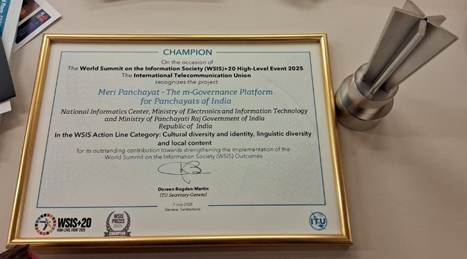
- 22 Jul 2025
In News:
India’s digital governance model received global recognition as the Meri Panchayat mobile application won the prestigious WSIS Prizes 2025 Champion Award under the category Cultural Diversity and Identity, Linguistic Diversity and Local Content. The award was presented during the WSIS+20 High-Level Event 2025 held in Geneva, Switzerland.
Key Highlights:
- The award was conferred by the International Telecommunication Union (ITU) as part of the World Summit on the Information Society (WSIS) initiative.
- The WSIS+20 event commemorated 20 years of WSIS, providing a platform to assess digital progress, address new challenges, and promote inclusive information societies.
- The event was co-hosted by ITU and the Swiss Confederation, and co-organized by UNESCO, UNDP, and UNCTAD.
About the “Meri Panchayat” App:
- A flagship m-Governance platform developed by the Ministry of Panchayati Raj in collaboration with National Informatics Centre (NIC) under the Ministry of Electronics and IT (MeitY).
- Designed to empower 2.65 lakh Gram Panchayats, the app caters to over 950 million rural residents and 25 lakh elected Panchayat representatives.
Key Features:
- Real-time Access: Budgets, receipts, payments, and Panchayat-level development plans.
- Transparency & Accountability: Social audit tools, geo-tagged fund utilization, and grievance redressal mechanisms.
- Participatory Governance: Enables citizens to propose projects, rate completed works, and view Gram Sabha decisions.
- Multilingual Support: Interface available in 12+ Indian languages, enhancing local inclusivity.
- Weather and Civic Info: Gram Panchayat-level weather forecasts, civic services, and infrastructure details.
Significance:
- The app strengthens participatory democracy by digitally integrating rural citizens into governance.
- It aims to bridge the digital divide and promote linguistic and cultural inclusivity in rural India.
- Recognized globally for promoting citizen-centric governance and local content diversity.
Bima Sakhi Yojana
- 22 Jul 2025
In News:
Life Insurance Corporation of India (LIC) has signed a Memorandum of Understanding (MoU) with the Department of Rural Development, Ministry of Rural Development, to implement the Bima Sakhi Yojana in rural areas. The agreement was formalized during the ‘Anubhuti’ national conclave on financial inclusion held in Goa.
About Bima Sakhi Yojana:
- Implementing Body: Life Insurance Corporation of India (LIC) in collaboration with the Union Ministry of Rural Development.
- Objective: To promote financial inclusion and women empowerment by facilitating their participation in the insurance distribution sector.
- Target Group: Rural women aged 18–70 years, with at least a Class 10 qualification.
Key Features:
- Stipendiary LIC Agency Scheme:
- Women are inducted as LIC agents with all associated privileges.
- The scheme offers a monthly stipend for the initial three agency years:
- ?7,000 in the first year
- ?6,000 in the second year
- ?5,000 in the third year (Subject to performance and terms and conditions)
- Commission Benefits:
- In addition to stipends, Bima Sakhis are eligible for sales commissions.
- A commission of ?48,000 (excluding bonuses) is provided in the first year for qualifying agents.
- Training & Career Path:
- Selected candidates undergo specialized training to build capacity in insurance awareness and financial literacy.
- Post-training, they function as LIC agents.
- Graduates among them may be eligible to become LIC Development Officers.
- Scale of Implementation: The scheme aims to appoint 2 lakh Bima Sakhis over a period of three years, with focus on enhancing rural outreach and insurance penetration.
Eligibility Criteria:
- Age Limit: 18 to 70 years
- Minimum Education: Must have passed Class X
- Preference: Women from rural areas are prioritized
Ineligibility Conditions:
- Women who are:
- Related to existing LIC agents or employees (including spouse, children, siblings, parents, and in-laws)
- Retired LIC employees or ex-agents
- Currently working as LIC agents
Significance:
- Promotes gender empowerment and financial literacy in rural India.
- Part of government’s push for inclusive financial growth through public-private partnerships.
- Illustrates convergence between LIC’s social responsibility and government rural development goals.
Hatti Tribe
- 22 Jul 2025
In News:
Recently, two brothers from the Hatti tribe in the Trans-Giri region of Sirmaur district, Himachal Pradesh, married the same woman under the traditional custom of polyandry. The wedding, held in Shillai village, was conducted openly and witnessed by hundreds, reviving attention to this rare tribal practice.
About the Hatti Tribe
- The Hatti community derives its name from the traditional occupation of selling agricultural produce, meat, and wool in local markets called haats.
- They reside primarily in the Himachal–Uttarakhand border region, especially in the basins of the Giri and Tons rivers, both tributaries of the Yamuna.
- The Hattis are divided into two major groups:
- One in Trans-Giri, Sirmaur district (Himachal Pradesh)
- Another in Jaunsar-Bawar (Uttarakhand)
- They maintain similar cultural practices, and intermarriage between these clans is common.
- The community follows a traditional council system called ‘Khumbli’ for resolving social issues.
- As of 2023, the Hatti tribe in Himachal Pradesh was granted Scheduled Tribe (ST) status, while Jaunsar-Bawar in Uttarakhand received tribal status in 1967.
- Their economy is largely agrarian, with a focus on cash crops due to favorable climatic conditions.
The Tradition of Polyandry ("Jajda")
- Polyandry in the Hatti community is locally called “Jajda” and was historically practiced to prevent division of ancestral land.
- The ritual includes a marriage procession of the bride to the groom’s village and a ceremony called “Seenj”.
- Local priests chant mantras in the native language and conclude the ceremony with blessings and offerings like jaggery.
- This practice has declined in recent decades due to increasing literacy among women, social modernization, and economic shifts.
Legal and Social Acceptance
- Polyandrous marriages are informally recognized under Himachal Pradesh revenue laws, where the practice is referred to as “Jodidara”.
- Though rare, such marriages continue to be socially accepted in some remote villages of Trans-Giri, Kinnaur, and Jaunsar-Bawar.
Demographics
- As per the 2011 Census, the Hatti population was around 2.5 lakh, and estimates now suggest about 3 lakh people across 450 villages in the Trans-Giri region alone.
Cultural and Practical Rationale
According to Hatti elders and community leaders:
- Land Preservation: Prevents fragmentation of ancestral property.
- Joint Family Bonding: Promotes unity and mutual understanding among brothers.
- Labor Sharing: Ensures adequate manpower to manage scattered agricultural lands in hilly terrain.
- Security: A larger family offers greater social and economic protection in tribal settings.
Cy-TB Test

- 22 Jul 2025
In News:
Kerala has introduced Cy-TB, a new intradermal diagnostic tool, under the National TB Elimination Programme (NTEP) to identify and manage latent tuberculosis infections (LTBI).
What is the Cy-TB Test?
- Cy-TB is a third-generation skin test approved by the Central TB Division, Government of India.
- It involves the intradermal injection of 0.1 ml of Mycobacterium tuberculosis-specific antigens (ESAT-6 and CFP-10) into the inner forearm.
- If an individual develops a raised area of 5 mm or more within 48–72 hours, it indicates TB infection.
- The test is:
- Highly specific, accurate, and user-friendly
- Administered by a trained nurse
- Requires follow-up for reading the result
- A cost-effective alternative to the Interferon Gamma Release Assay (IGRA), which requires lab support
TB Infection vs. Active TB Disease
- TB infection means that a person harbours Mycobacterium tuberculosis bacteria in a dormant form and shows no symptoms.
- These individuals are not contagious.
- If left untreated, about 5–10% may progress to active TB when their immune system weakens.
Why Focus on Latent TB?
Kerala is prioritising treatment of latent TB infections as part of its last-mile strategy in TB elimination. Despite a 40% reduction in TB transmission over six years, the state faces challenges due to subclinical (asymptomatic) TB and a high burden of comorbidities such as diabetes, chronic kidney disease, and alcohol abuse.
Key Study in Thiruvananthapuram (2022)
- A cross-sectional community study found that 20.5% of adults had TB infection.
- Prevalence increased with age, from 11.5% (18–35 years) to 30.3% (above 58 years).
- State-level estimates suggest around 22% of Kerala’s general population is latently infected.
Burden of Tuberculosis (India & Global)
According to the WHO Global Tuberculosis Report 2024:
- India accounts for 26% of global TB cases – the highest worldwide.
- TB continues to be the leading infectious disease killer.
- Each year, around 10 million people fall ill globally, and 1.5 million die of TB.
- TB is the top cause of death among people with HIV and a major driver of antimicrobial resistance (AMR).
Implementation of Cy-TB in Kerala
- The Cy-TB test will be used in district TB centres, taluk hospitals, dialysis centres, and some block-level facilities.
- It will also be used to screen residents of old age homes, especially where pulmonary TB cases have emerged.
- The test is also available in major private hospitals.
High-Risk Groups for Preventive Therapy
Only high-risk individuals who test positive for latent TB are recommended for TB preventive therapy (TPT). These include:
- People on dialysis or awaiting transplants
- Patients on immunosuppressive or anti-TNF therapy
- Individuals with silicosis
- Healthcare workers exposed to TB
- Elderly in institutional settings
Preventive TB Treatment Regimens
- 3HP: 3 months of weekly doses of Isoniazid and Rifapentine
- 6H: 6 months of daily Isoniazid. These regimens use fewer drugs and are shorter than active TB treatment protocols.
Guryul Ravine Fossil Site
- 22 Jul 2025
In News:
The Geological Survey of India (GSI) has raised an alarm over a serious threat to the Guryul Ravine fossil site located in Khonmoh, on the outskirts of Srinagar, Jammu & Kashmir. The site holds immense geological significance and is facing the risk of degradation due to human activity.
About the Site
The Guryul Ravine is situated near Khonmoh in Jammu & Kashmir, close to the Dachigam National Park. Geologically, the area is part of the Vihi district. It falls within the ecologically sensitive Khonmoh Conservation Reserve.
- This fossil site is globally significant because it contains sedimentary layers that preserve evidence of the Permian–Triassic mass extinction event. These geological layers date back around 260 million years and represent one of the most catastrophic periods in Earth’s biological history.
- Remarkably, the site also shows signs of what is believed to be the world’s earliest recorded tsunami, with the imprint still visible in the exposed strata.
Significance of the Permian–Triassic Extinction Event
- Also referred to as the “Great Dying,” the Permian–Triassic extinction event occurred around 251.9 million years ago. It marks a major boundary between the Permian and Triassic geological periods and also separates the Paleozoic and Mesozoic eras.
- This event was the most severe extinction episode in Earth’s history. It led to the loss of nearly 90–95% of marine species and about 70% of terrestrial vertebrate species. The extinction dramatically reshaped life on Earth and paved the way for the rise of dinosaurs in the subsequent Mesozoic era.
Conservation Concerns
- The GSI has warned that this invaluable geo-heritage site is under threat due to encroachment and unregulated activities. It has recommended urgent steps to protect the fossil-rich area to preserve its scientific and educational value.
Allographa effusosoredica
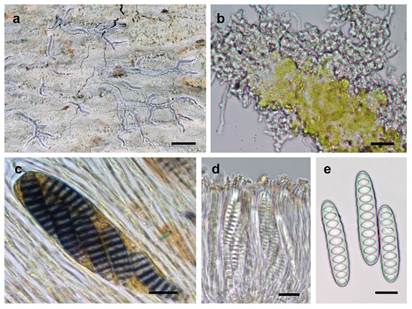
- 20 Jul 2025
In News:
A team of Indian scientists from MACS-Agharkar Research Institute, Pune (under the Department of Science & Technology) has discovered a new species of lichen named Allographa effusosoredica in the Western Ghats, a UNESCO World Heritage Site and biodiversity hotspot. This crustose lichen exhibits effuse soredia and contains norstictic acid, a rare secondary metabolite within its genus.
Scientific and Molecular Significance
- The species was examined through polyphasic taxonomy, integrating:
- Morphological traits
- Chemical profiling
- Molecular sequencing using genetic markers:
- Fungal DNA markers: mtSSU, LSU, RPB2
- Algal symbiont marker: ITS
- The lichen’s photobiont was identified as a species of Trentepohlia, advancing the understanding of tropical algal diversity in lichens.
- Though morphologically similar to Graphis glaucescens, it is phylogenetically closest to Allographa xanthospora.
Symbiosis in Lichens
- Lichens are composite organisms, formed by a symbiotic association between:
- A fungal partner (mycobiont) — provides structure and protection.
- A photosynthetic partner (photobiont), such as green algae or cyanobacteria — produces nutrients via photosynthesis.
- This discovery supports the concept of locally adapted symbiosis, emphasizing co-evolution in tropical ecosystems.
Ecological Importance of Lichens
- Lichens are vital for:
- Soil formation
- Feeding insect populations
- Acting as bioindicators of air quality and ecosystem health.
Conservation and Biodiversity Impact
- Allographa effusosoredica is:
- The 53rd Allographa species reported from India.
- The 22nd species of this genus documented in the Western Ghats.
- The first Indian Allographa species validated using molecular tools.
- The study was supported by the Anusandhan National Research Foundation (ANRF) and contributes to the growing inventory of India’s cryptic biodiversity.
Global Measles Resurgence
- 20 Jul 2025
In News:
Virologists raise alarm over surge in measles cases worldwide.
What is Measles?
- Measles is a highly contagious viral disease caused by the Measles morbillivirus (from the paramyxovirus family).
- It primarily affects children, but any non-immune person (unvaccinated or without immunity) is at risk.
- The virus spreads via airborne transmission—through coughing, sneezing, and respiratory droplets. It can remain in the air or on surfaces for up to 2 hours.
- Infectivity: ~90% of unvaccinated individuals exposed will contract the virus.
Global Surge in Cases (2023–2025)
- The World Health Organization (WHO) and US CDC reported a 30-fold global surge in measles cases from 10,000 in 2022 to 10.3 million in 2023.
- Outbreaks have been recorded in Africa, Europe, Southeast Asia, and the Americas.
- Africa: Nearly half of global outbreaks.
- Europe: 41 of 53 countries reported cases.
- United States: Worst outbreak since 1992 with 1,300+ cases across 40 states, including Texas, Ohio, and California.
- Americas (2025): 11-fold increase in cases due to international travel.
Symptoms and Progression
- Incubation: Symptoms appear 7–14 days after exposure.
- Early signs: High fever, cough, runny nose, conjunctivitis (red, watery eyes), and white spots in the mouth (Koplik spots).
- Rash: Starts on the face and neck, spreads to the entire body, lasting 5–6 days.
- Contagious: 4 days before and after rash onset.
Complications
- Common: Pneumonia, diarrhoea, encephalitis (brain inflammation), deafness.
- Severe:
- 1–3 per 1,000 unvaccinated children may die.
- Can cause blindness, subacute sclerosing panencephalitis (SSPE) (a fatal brain disorder).
- In pregnancy: Can lead to stillbirth or premature delivery.
Vaccination and Prevention
- No specific antiviral treatment exists; only preventive vaccination is effective.
- MMR Vaccine (Measles, Mumps, Rubella):
- Two doses recommended:
- 1st dose: 12–15 months
- 2nd dose: 4–6 years
- During outbreaks or travel: Can be given from 6 months of age.
- Two doses recommended:
- Herd Immunity Threshold: 95% vaccination coverage needed to prevent outbreaks.
- Current US rate: 92.7%, with rising nonmedical exemptions at 3.3%, falling short of safety threshold.
Causes of Resurgence
- Vaccine hesitancy, misinformation, and declining immunisation rates.
- Conflict zones, weak health systems, and interrupted vaccination drives in developing regions.
- Post-COVID travel rebound accelerating transcontinental spread.
Call to Action by Scientists and WHO
- Global Virus Network (GVN) and virologists urge:
- Urgent vaccination of unvaccinated children and vulnerable adults.
- Strengthening public health infrastructure.
- Enhancing outbreak surveillance and public awareness.
- Focused outreach in rural and underserved communities.
Exercise SIMBEX
- 20 Jul 2025
In News:
The Indian Navy is participating in the 32nd edition of the Singapore-India Maritime Bilateral Exercise (SIMBEX) in Singapore in July 2025. It marks one of the longest uninterrupted bilateral naval exercises India has with any country.
What is SIMBEX?
- SIMBEX stands for Singapore-India Maritime Bilateral Exercise
- It is an annual naval exercise conducted between the Indian Navy and the Republic of Singapore Navy (RSN)
- Origin: Initiated in 1994 as Exercise Lion King
- It has evolved into a complex maritime engagement, showcasing interoperability in surface, subsurface, and air operations
Significance
- It supports India’s Vision SAGAR (Security and Growth for All in the Region) and the Act East Policy
- Promotes regional maritime security cooperation and ensures the safety of sea lanes of communication (SLOCs)
- Reinforces commitment to a rules-based international maritime order, especially amidst rising piracy and threats from non-state actors
Indian Navy’s Participation (2025 Edition)
- The Indian naval contingent includes:
- INS Delhi – Guided missile destroyer
- INS Satpura – Stealth frigate
- INS Shakti – Fleet replenishment tanker
- INS Kiltan – Anti-submarine corvette
- These vessels are indigenously designed and equipped with advanced systems for high-seas operations
Strategic Engagement Highlights
- SIMBEX is a critical part of India’s expanding maritime diplomacy in the Indo-Pacific
- The naval exercise is conducted alongside a goodwill visit to Singapore, coinciding with the 60th anniversary of India-Singapore diplomatic ties
- Following Singapore, the Indian Navy’s Eastern Fleet is also scheduled to visit the Philippines and Vietnam
Broader Defence Cooperation with Singapore
In addition to SIMBEX, India and Singapore engage in:
- Exercise Agni Warrior (Army)
- Joint Military Training (JMT) (Air Force)
India also engages with ASEAN through:
- ASEAN-India Maritime Exercise (First held in 2023, co-hosted by Singapore)
- Participation in ASEAN-led forums like:
- ADMM-Plus
- ASEAN Regional Forum
- East Asia Summit
Vision SAGAR & Maritime Security
India’s Vision SAGAR emphasizes:
- Collaborative maritime partnerships
- Combating common maritime threats (e.g., piracy, trafficking, and disasters)
- Securing economic and strategic interests in the Indian Ocean Region (IOR)
Chronic Venous Insufficiency (CVI)
- 20 Jul 2025
In News:
Former U.S. President Donald Trump, aged 79, was recently diagnosed with Chronic Venous Insufficiency (CVI) — a common vascular condition, especially among individuals above 70 years. This brings attention to a condition affecting millions globally.
What is Chronic Venous Insufficiency (CVI)?
CVI is a circulatory disorder where the veins in the legs fail to return blood effectively to the heart. This results in blood pooling in the lower limbs due to damaged or weak vein valves, increasing venous pressure.
- Typically begins in one leg and may progress to both.
- Common symptoms include:
- Leg pain, swelling
- Varicose veins
- Cramps, skin discoloration, or thickening
- In advanced cases: venous ulcers
- In some cases, patients may be asymptomatic in early stages.
Epidemiology
- Affects approximately 1 in 20 adults
- Risk significantly increases with age
- Particularly common among individuals over 70
- People with CVI are about 60% more likely to also have cardiovascular disease compared to those without the condition
Risk Factors and Causes
CVI can result from or be worsened by:
- Obesity and pregnancy
- Family history of vein disorders
- Leg injury, surgery, or prior blood clots
- High blood pressure, smoking
- Lack of physical activity or prolonged sedentary lifestyle
Management and Treatment
Lifestyle Modifications
- Regular physical activity
- Avoid prolonged sitting or standing
- Weight management
- Elevating the legs to aid venous return
Medical Interventions
- Compression therapy: Use of compression stockings or bandages to support vein function
- Medications that enhance venous tone and reduce inflammation
Surgical/Minimally Invasive Procedures
- Endovenous laser ablation
- Vein glue therapy: Seals off malfunctioning veins
- Vein ligation/stripping (less common today due to invasive nature)
These newer techniques often ensure quicker recovery than traditional surgery.
Global Wetland Outlook 2025
- 20 Jul 2025
In News:
The Global Wetland Outlook (GWO) 2025, released by the Ramsar Convention on Wetlands, highlights alarming degradation trends in global wetlands—especially in Africa, Latin America, and the Caribbean—with implications for climate resilience, biodiversity, and socio-economic wellbeing.
What are Wetlands?
A wetland is a land area saturated with water—either permanently or seasonally—and functions as a distinct ecosystem. Wetlands include:
- Inland: Lakes, rivers, swamps, peatlands
- Coastal: Mangroves, tidal flats, coral reefs, estuaries
- Human-made: Rice paddies, reservoirs, wastewater ponds
Key Findings:
- Produced by: Scientific and Technical Review Panel (STRP) of the Ramsar Convention
- Global Wetland Loss: Since 1970, the world has lost 411 million hectares of wetlands—a 22% decline in extent.
- Current loss rate: ~0.52% annually
- Regional Degradation:
- Most severe in Africa, Latin America, and the Caribbean
- Africa’s wetlands are deteriorating faster than they can be restored, especially in South Africa
- Drivers of degradation:
- Africa, Latin America & Caribbean: Urbanisation, industrialisation, infrastructure development
- Europe: Drought
- North America & Oceania: Invasive species
- Economic Valuation:
- Global value of wetlands: $7.98 to $39.01 trillion/year
- Africa’s wetlands (2023): $825.7 billion, vs Asia’s $10.58 trillion
- Restoration Costs vs Conservation:
- Restoration: $1,000 to $70,000 per hectare/year
- Conservation is cheaper and more effective long-term
- Policy Insight: Most wetlands in Least Developed Countries (LDCs) are in poor condition, while those in high-income countries are in better health.
Africa’s Wetlands: A Deepening Crisis
- Millions depend on wetlands for food, water, disaster protection, and climate resilience.
- The Kafue Flats (Zambia) restoration example shows:
- $300,000 investment revived flooding
- Supported biodiversity and over a million people
- Boosted artisanal fisheries worth $30 million annually
- Warning from Ramsar Secretariat: Loss of wetlands is a major barrier to achieving global climate, biodiversity, food, and poverty targets.
India and Wetlands
- India has ~4.6% of its land as wetlands
- Hosts 91 Ramsar Sites – largest in South Asia and third in Asia
- Wetland types: Himalayan high-altitude lakes, Gangetic floodplains, mangroves (e.g., Sundarbans), coastal lagoons
Importance of Wetlands:
|
Function |
Explanation |
|
Biodiversity Hotspots |
Support endangered and endemic species |
|
Water Purification |
Trap pollutants and sediments |
|
Flood Regulation |
Act as natural buffers |
|
Carbon Sequestration |
Slow decomposition stores carbon |
|
Livelihoods |
Sustain agriculture, fisheries, tourism |
Ramsar Convention on Wetlands
- Adopted: 1971, Ramsar, Iran | Came into force: 1975
- India joined: 1982
- Goal: Conservation and wise use of wetlands globally
- Ramsar Site Criteria: Supports endangered species, ≥20,000 waterbirds, or critical fish spawning grounds
Key Framework: Kunming-Montreal Global Biodiversity Framework (GBF)
- Adopted in 2022 (COP15 to Convention on Biological Diversity)
- Dubbed “Paris Agreement for Nature”
- Targets:
- Halve invasive species spread
- Cut harmful subsidies by $500 billion/year
- 30x30 Target: Protect 30% of land + marine areas by 2030
- Restore 30% of degraded ecosystems by 2030
Recommendations from GWO 2025
- Increase Wetland Financing:
- Incorporate wetlands in KM-GBF finance targets
- Mobilise private-public funding
- Cross-Border Collaboration: Enhance regional conservation partnerships, especially in Africa
- Value Nature in National Accounts: Recognise GDP contributions from wetlands, forests, biodiversity
- Invest in Nature-Based Solutions: Wetlands can buffer climate shocks and reduce disaster response costs
Marungur Excavation
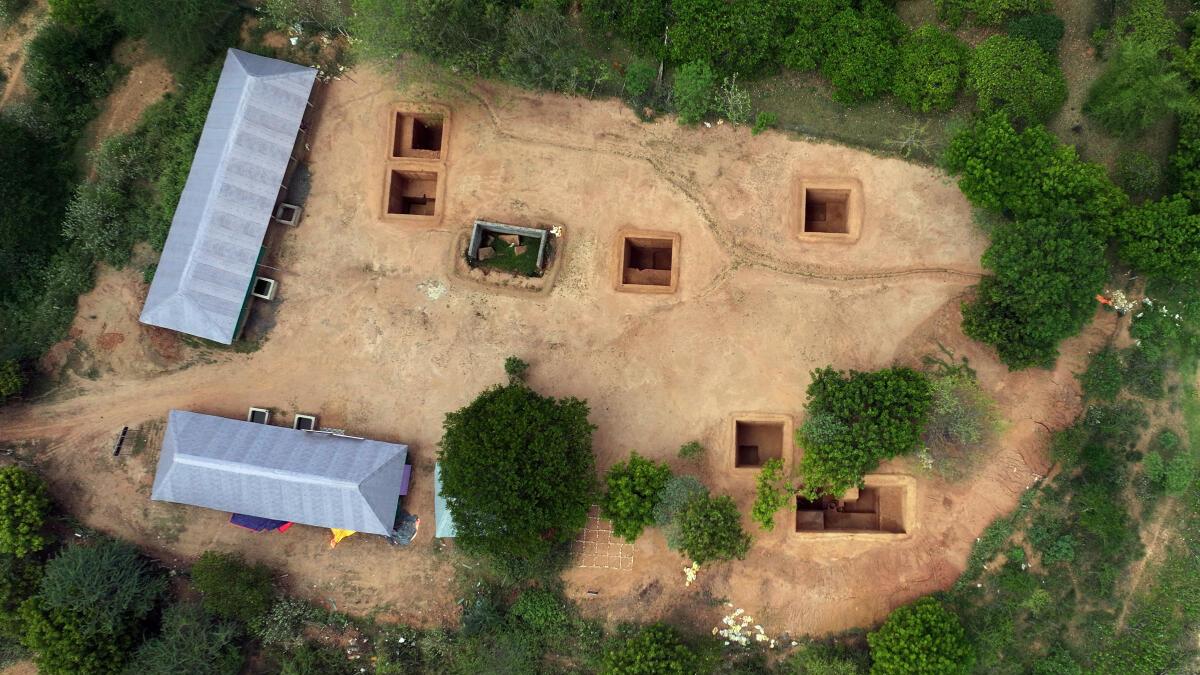
- 21 Jul 2025
In News:
The Tamil Nadu State Department of Archaeology (TNSDA) has completed a landmark archaeological excavation at Marungur village, located in Panruti taluk, Cuddalore district, uncovering a habitation-cum-burial site dating from the Iron Age to the Early Historic period. This multidisciplinary excavation offers significant insights into the cultural evolution of ancient Tamil Nadu’s Naduvil Mandalam (Central Territorial Division), between the Thenpennai and Vada Vellar rivers.
Key Features:
1. Rare Dual Site Discovery
- Both a habitation mound and an associated burial site were found together — a rarity in Tamil Nadu.
- The site is situated at 100 metres above mean sea level, adjacent to a pond and covered by laterite soil.
2. Chronological Context
- Dated tentatively to the transition from late Iron Age to Early Historic Period.
- Radiocarbon dating (AMS) of charcoal samples, phytolith studies, and Optically Stimulated Luminescence (OSL) analysis are underway to confirm dates.
3. Advanced Techniques Used
- UAV Mapping, LiDAR (Light Detection and Ranging), stratigraphic trenching, and archaeo-botanical studies.
- Collaboration with Beta Analytic Laboratory (USA) and the French Institute of Pondicherry for dating and pollen analysis.
Major Discoveries
A. Habitation Mound (8 Trenches Excavated)
- Pottery: Rouletted ware, red-slipped ware, black-and-red ware, grey ware, coarse red ware, and graffiti-inscribed potsherds (some resembling Indus signs).
- Artifacts (95 antiquities): Bone tools (points), burnishing stones, terracotta pipes, and beads (carnelian, agate, quartz, glass, terracotta).
- Iron implements: Crescent-shaped chisels, knives.
- Conch shell cores and antimony rods (ornamental use).
- Copper coin of Raja Raja Chola I from upper layers.
- Large terracotta storage jars (1.25 m), one containing six bone tools.
B. Burial Site (2 Trenches Excavated in Cashew Grove)
- Megalithic Stone Circles (Laterite):
- Two concentric circles (outer and inner), capstone-protected burial urns.
- Total of 10 urns recovered.
- Grave Goods:
- Iron swords, red jasper beads, black-and-red ware, red-slipped ware.
- Offering pots around urns — evidence of complex burial rituals.
C. Tamil-Brahmi Inscribed Potsherds
- Found in urn burials and dated paleographically to 2nd–3rd century BCE.
- Inscriptions include terms like “a-ti-y(a)-ka-n”, “a-ma-?”, and “a-ta”.
- Significance: Among earliest epigraphic evidence of Tamil-Brahmi in burial contexts.
Significance:
|
Aspect |
Significance |
|
Cultural Chronology |
Sheds light on the transition from the Iron Age to Early Historic society. |
|
Urban & Trade Patterns |
Proximity to ancient port cities like Arikamedu and Poompuhar hints at external trade. |
|
Script & Literacy |
Tamil-Brahmi inscriptions expand understanding of early Tamil epigraphy. |
|
Burial Practices |
Megalithic urn burials with grave goods indicate complex socio-religious beliefs. |
|
Scientific Advancement |
Integration of modern remote sensing and dating techniques in Indian archaeology. |
Future Steps
- Radiometric Dating: Charcoal to be analyzed using Accelerator Mass Spectrometry (AMS) in the USA.
- Pollen and phytolith analysis to reconstruct ancient diet and environmental conditions.
- Thermoluminescence and petrology studies to date ceramics and sediment exposure.
- TNSDA proposes further surveys at Manikkollai (30 km from Marungur) for 2025–26.
India Emerges as Global Leader in Real-Time Digital Payments
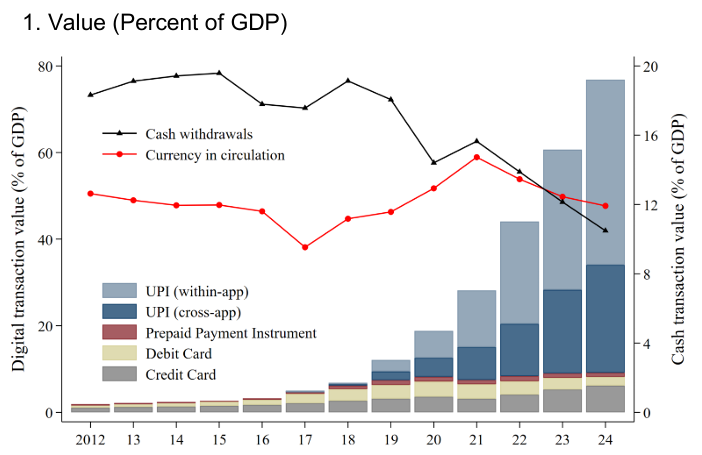
- 21 Jul 2025
In News:
India has cemented its position as the world’s foremost digital payments economy, with the Unified Payments Interface (UPI) registering 18.39 billion transactions in June 2025, according to a report jointly prepared by the International Monetary Fund (IMF) and FIS Global.
About the Report: Fast Payments 2025
- Prepared by: IMF and FIS Global
- Focus: Assessment of digital public infrastructure enabling real-time payments
- Key Metric Introduced: Faster Payment Adoption Score (FPAS) – a benchmark for evaluating the scale and effectiveness of fast payment systems across 30 countries
India’s Standout Performance
- Top Global Rank: India scored 87.5% on FPAS, ranking highest globally—outpacing Brazil, Singapore, the United Kingdom, and the United States.
- UPI Ecosystem Scale:
- Handles over 640 million daily transactions
- Caters to approximately 491 million users and 65 million merchants
- Supported by a network of 675+ banks
- Speed and Cost Efficiency:
- Payment settlement within 5 seconds
- Transactions are virtually cost-free for users
- International Footprint:
- UPI services are now live in seven countries, including France, UAE, and Singapore
- India is advocating its adoption within the BRICS+ grouping as a model for cross-border payment interoperability
Key Strengths of UPI Infrastructure
- Interoperability: Seamless transactions across multiple platforms (PhonePe, Google Pay, Paytm, etc.) and banks
- Inclusivity Features:
- Aadhaar-based linking
- USSD-based services for feature phones
- Multilingual interfaces to facilitate rural access
- Built on India Stack: Utilizes digital infrastructure components like Aadhaar, eKYC, DigiLocker, and Account Aggregator
- Security Framework:
- Real-time fraud detection
- Tokenization and robust regulatory oversight
- Collaborative Ecosystem: A joint effort of NPCI, fintech players, and RBI, ensuring scalability and resilience
88th Executive Committee Session of the Codex Alimentarius Commission (CCEXEC88)
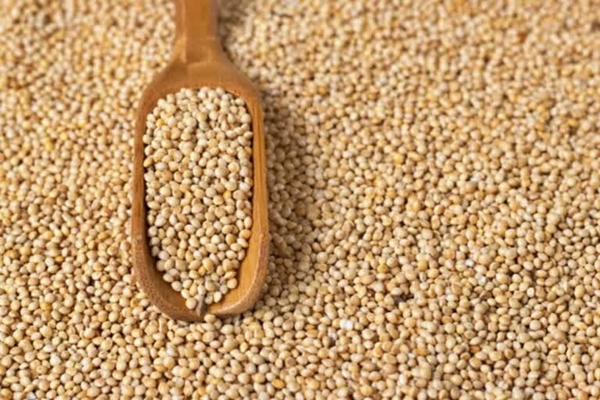
- 21 Jul 2025
In News:
India’s contributions were widely appreciated at the 88th Executive Committee Session of the Codex Alimentarius Commission (CCEXEC88) held at FAO Headquarters, Rome.
What is the Codex Alimentarius?
- A collection of internationally recognized food standards, guidelines, and codes of practice.
- Promotes consumer health protection, food safety, and fair-trade practices.
- Recognized under the WTO Agreement on the Application of Sanitary and Phytosanitary (SPS) Measures as a global reference point.
Codex Alimentarius Commission (CAC)
|
Feature |
Detail |
|
Established |
1963 by FAO and WHO |
|
Type |
Intergovernmental food standards body |
|
Headquarters |
Rome, Italy |
|
Objectives |
To protect consumer health and ensure fair practices in the food trade |
|
Members |
189 members: 188 countries + European Union |
|
India’s Membership |
Since 1964 |
Structure of CAC:
- Codex Commission
- Executive Committee (CCEXEC)
- Codex Secretariat
- Subsidiary Bodies and Committees
Meetings alternate between Geneva and Rome annually. Funded by regular budgets of FAO and WHO.
India’s Contributions at CCEXEC88 (2025):
1. Millet Standards: India chaired the development of Codex group standards for whole millet grains, alongside Mali, Nigeria, and Senegal. These standards are up for final approval at CAC48.
2. Strategic Planning (2026–2031):
- India led discussions on SMART (Specific, Measurable, Achievable, Relevant, Time-bound) indicators for monitoring Codex outcomes.
- These KPIs will guide Codex’s strategic direction and will be adopted at CAC48.
3. Regional Capacity Building:
- India mentored Bhutan, Nepal, Bangladesh, Sri Lanka, and Timor Leste under the Codex Trust Fund (CTF).
- Urged other developing countries to use the CTF for mentorship and twinning programs.
Other Leadership Roles by India in Codex:
|
Domain |
India's Role |
|
Spices & Herbs |
Chairs Codex Committee on Spices and Culinary Herbs (CCSCH) since 2014 |
|
Fresh Produce |
Led standard development for dates, co-chaired for turmeric and broccoli |
|
Digital Participation |
Promotes transparent, inclusive discussions in Codex committees |
National Codex Contact Point (NCCP), India
- Constituted by: Food Safety and Standards Authority of India (FSSAI)
- Role:
- Liaison with the Codex Secretariat
- Coordinate India’s input via National Codex Committee
- Facilitate domestic stakeholder consultation for Codex decisions
Kashi Declaration
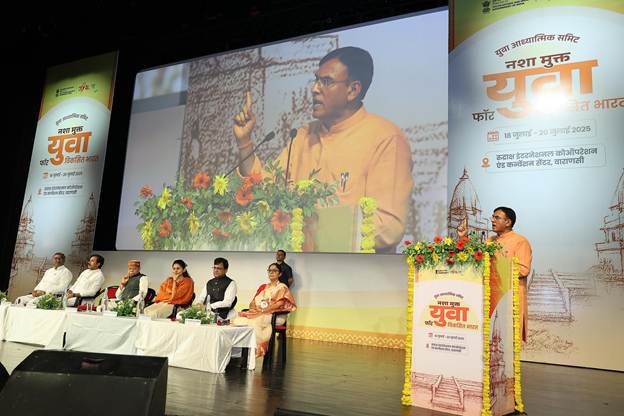
- 21 Jul 2025
In News:
The Youth Spiritual Summit 2025 concluded at the Rudraksh International Convention Centre, Varanasi, with the formal adoption of the Kashi Declaration — a landmark roadmap to combat drug abuse through youth and spiritual leadership.
- Organised by: Ministry of Youth Affairs and Sports
- Theme: "Drug-Free Youth for Developed India"
What is the Kashi Declaration?
The Kashi Declaration is a national action plan to counter substance abuse in India. It integrates spiritual wisdom, youth empowerment, and institutional coordination to establish a Nasha Mukt Yuva (Drug-Free Youth) by 2047, aligning with the vision of Viksit Bharat @2047.
Key Objectives:
- Eradicate Drug Abuse: Mobilise youth to build a drug-free society by 2047.
- Spiritual Mobilisation: Leverage India’s spiritual heritage as a tool for transformation and healing.
- Whole-of-Society Approach: Involve families, schools, communities, and institutions in prevention and rehabilitation.
- Empower Youth Volunteers: Enable MY Bharat clubs to conduct awareness, outreach, and de-addiction drives.
- Institutional Coordination: Establish a Joint National Committee for multi-ministerial convergence and periodic reporting.
Major Features:
|
Feature |
Details |
|
Plenary-Driven Agenda |
Covered themes of psychology, drug trafficking, awareness, and spiritual rehabilitation. |
|
Multi-Ministerial Action |
Involves Ministries of Youth Affairs, Social Justice, Home Affairs, Labour, and Culture. |
|
Annual Review Mechanism |
Progress tracked via the Viksit Bharat Young Leaders Dialogue 2026. |
|
Digital Monitoring |
Measures proposed to curb online targeting of schoolchildren for drugs. |
|
Community Outreach |
Grassroots campaigns, pledge drives, and support services launched through the MY Bharat platform. |
Institutional Mechanisms Proposed:
- Joint National Committee: For inter-ministerial coordination and implementation oversight.
- Annual Progress Reporting: Ensures transparent monitoring and accountability.
- National Platform: To connect affected youth with rehabilitation and support services.
Biostimulants
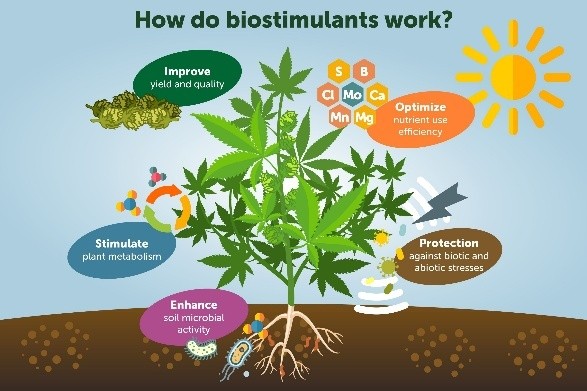
- 21 Jul 2025
In News:
Union Agriculture Minister Shivraj Singh Chouhan last week wrote to Chief Ministers of all states to immediately stop the “forced tagging” of nano-fertilisers or biostimulants along with conventional fertilisers.
What are Biostimulants?
Biostimulants are substances or microorganisms that enhance nutrient uptake, plant growth, yield, and stress resistance in crops. They are distinct from fertilisers and pesticides, as they do not directly supply nutrients or control pests.
- Composition: Often derived from plant waste, seaweed extracts, or microbes.
- Function: Stimulate physiological processes in plants.
- Not classified as: Fertilisers (under nutrient input) or Pesticides (regulated under Insecticides Act, 1968).
Official Definition (FCO, 1985): A substance or microorganism whose primary function is to stimulate physiological processes in plants, enhancing nutrient uptake, growth, and yield—but not including pesticides or plant growth regulators.
Regulatory Framework
- Governing Law: Fertiliser Control Order (FCO), 1985 – amended in February 2021 to include biostimulants.
- Central Biostimulant Committee (CBC): Established in April 2021 for five years to advise the Ministry on:
- Product approval and specifications
- Sampling/testing methods
- Lab and data standards
Toxicity and Safety Requirements:
To be approved, biostimulants must undergo:
- 5 acute toxicity tests: Oral, dermal, inhalation (rat), skin, and eye irritation (rabbit)
- 4 eco-toxicity tests: Impact on fish, birds, honeybees, and earthworms
- Field trials: At 3 agro-ecological zones, with 3 doses, for one crop season
No biostimulant shall contain pesticide beyond 0.01 ppm.
Why Tightened Regulation?
- Previous Lack of Oversight: Biostimulants operated in a regulatory vacuum for years.
- Market Flooded with Unapproved Products: Over 30,000 unregulated products were in circulation.
- Farmer Complaints: Rising concerns over efficacy and “forced sales” with subsidised fertilisers like urea and DAP.
- Judicial Push: A 2011 Punjab & Haryana HC observation prompted states to monitor biostimulant sales more stringently.
Recent Government Measures
- Provisional Registration (2021–2024): Allowed 2-year sale of products while testing was underway. Deadline extended repeatedly until June 16, 2024. Post-June 2024: Unsold stocks from unregistered firms are no longer permitted for sale.
- Retailer Misuse: Reports of retailers forcing farmers to buy biostimulants with subsidised fertilisers prompted Union Agriculture Minister Shivraj Singh Chouhan to direct states to halt such practices.
- Product Crackdown: From over 8,000 products four years ago, the number of approved products is now down to 650.
- Crop-Specific Specifications (May 2025): Government notified biostimulant standards for crops including tomato, chilli, brinjal, paddy, cotton, potato, soybean, maize, etc.
Prithvi-II and Agni-I Ballistic Missiles
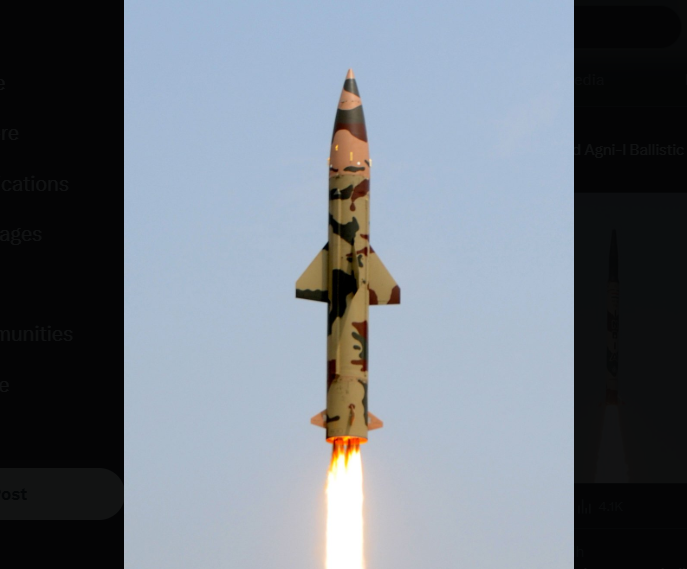
- 19 Jul 2025
In News:
India recently conducted successful test-firings of its nuclear-capable short-range ballistic missiles Prithvi-II and Agni-I from the Integrated Test Range (ITR), Chandipur, Odisha. The trials aimed to validate operational readiness and technical reliability of India’s strategic missile systems.
These tests follow closely on the heels of the Indian Army's successful high-altitude test of the Akash Prime air defence system in Ladakh, underscoring India’s advancing indigenous defence capabilities.
Strategic Significance
- Conducted by: Strategic Forces Command (SFC) under routine training and validation exercises.
- Developed by: Defence Research and Development Organisation (DRDO) under the Integrated Guided Missile Development Programme (IGMDP).
- Purpose:
- To validate accuracy, technical parameters, and combat readiness.
- To reinforce India’s nuclear deterrence and second-strike capability.
- To ensure strategic preparedness post the May 2025 Indo-Pak conflict.
Prithvi-II Missile: Key Features
|
Parameter |
Details |
|
Type |
Short-range, surface-to-surface ballistic missile |
|
Range |
~350 km |
|
Propulsion |
Liquid-fuelled |
|
Payload Capacity |
Up to 500 kg |
|
Warhead Type |
Conventional and nuclear |
|
Navigation |
Advanced inertial navigation system |
|
Deployment |
Road-mobile launcher |
|
Speed |
Above Mach 1 |
|
Role |
Part of India’s tactical nuclear strike capability |
Agni-I Missile: Key Features
|
Parameter |
Details |
|
Type |
Short-range, single-stage ballistic missile |
|
Range |
700–900 km |
|
Propulsion |
Solid-fuelled |
|
Payload Capacity |
Up to 1,000 kg |
|
Warhead Type |
Conventional and nuclear |
|
Accuracy |
High precision with advanced guidance |
|
Induction |
Early 2000s, operational with Indian Army |
|
Strategic Role |
Integral to India’s minimum credible deterrence posture |
Green Synthesis of Hydrogen Peroxide
- 19 Jul 2025
In News:
Indian scientists at the S.N. Bose National Centre for Basic Sciences (SNBNCBS) have developed a novel, eco-friendly method to synthesize hydrogen peroxide (H?O?) directly from sunlight and water using a photocatalyst called Mo-DHTA COF. This innovation marks a significant advancement in green chemistry and sustainable industrial practices.
What is Hydrogen Peroxide (H?O?)?
- A colorless, bitter-tasting liquid with powerful oxidizing properties.
- Environmentally friendly: Decomposes into water and oxygen without leaving harmful residues.
- Naturally present in trace amounts in the atmosphere.
- Unstable and decomposes readily, releasing heat.
- Found in household use (3–9% concentration) for disinfection, bleaching, and wound cleaning.
Applications
- Medical: Disinfectant, wound cleaner.
- Industrial: Textile and paper bleaching, foam rubber production, and rocket propellant.
- Environmental: Wastewater treatment, green sterilization.
- Energy & Chemistry: Fuel cells, chemical synthesis, and potentially in CO? reduction and water splitting.
Limitations of Conventional H?O? Production
- Energy-intensive and environmentally hazardous.
- Costly and not sustainable for large-scale, decentralized applications.
The Innovation: Mo-DHTA COF
What is it?
- Mo-DHTA COF stands for dimolybdenum paddlewheel-embedded Covalent Organic Framework.
- Developed by a DST-supported research team at SNBNCBS.
- Published in the journal Small.
Photocatalytic Mechanism
- Made from α-hydroquinone-based organic linkers and dimolybdenum units.
- Upon visible light exposure, the material generates excitons (electron-hole pairs).
- Electrons reduce oxygen to superoxide radicals, which then convert to H?O? through further reactions.
- Functions in various media (ethanol, benzyl alcohol, and even pure water).
Advantages of Mo-DHTA COF
|
Feature |
Description |
|
Eco-Friendly |
Uses only water and sunlight—no harmful by-products. |
|
High Photocatalytic Efficiency |
Effective even in pure water, not just organic solvents. |
|
Stability |
Structurally stable and recyclable, suitable for long-term use. |
|
Enhanced Performance |
Overcomes limitations of earlier photocatalysts like metal oxides, g-C?N?, and MOFs. |
|
Scalable |
Promising for industrial upscaling and decentralized chemical production. |
Significance and Future Potential
- Green Chemistry: Sets a foundation for cleaner chemical production methods.
- Healthcare & Pharma: Enables low-cost production of disinfectants.
- Environmental Remediation: Supports sustainable water purification and sterilization.
- Energy & Materials Science: Potential use in CO? reduction, water splitting, and fuel cell technologies.
- Research Outlook: Future focus includes optimization of metal-embedded COFs and exploring other catalytic systems for broader applications.
Akash Prime Missile System

- 19 Jul 2025
In News:
India has successfully conducted a high-altitude trial of the Akash Prime surface-to-air missile system in Ladakh, marking a major step in strengthening indigenous air defence capabilities, particularly for mountainous and high-altitude terrains.
What is Akash Prime?
Akash Prime is an upgraded variant of the Akash Surface-to-Air Missile (SAM) system, developed by the Defence Research and Development Organisation (DRDO). It is designed to operate efficiently in high-altitude, low-oxygen environments—ideal for India’s sensitive border regions like Ladakh and Sikkim.
Developers
- DRDO – Lead developer
- In collaboration with:
- Bharat Dynamics Limited (BDL)
- Bharat Electronics Limited (BEL)
Key Features
|
Feature |
Description |
|
Purpose |
Neutralizes aerial threats like enemy aircraft, drones, and cruise missiles |
|
Altitude Performance |
Successfully tested at 15,000 ft; engineered for deployment above 4,500 metres |
|
Seeker Technology |
Equipped with an indigenous Radio Frequency (RF) seeker for precise target acquisition during terminal phase |
|
Guidance System |
Hybrid: Command guidance + terminal active homing |
|
Range & Speed |
Operates within 25–30 km range; travels at Mach 2.5 |
|
Mobility |
Mounted on mobile platforms for rapid deployment across terrains |
|
All-Weather Capability |
Functions in extreme cold and low-density atmospheric conditions |
|
Kill Probability |
88% (single missile); up to 98.5% in dual-salvo mode |
Operational Significance
- High-Altitude Readiness: Specifically tailored for mountainous regions such as the Line of Actual Control (LAC).
- Versatile Deployment: Protects mobile, semi-mobile, and fixed military installations.
- Strategic Feedback Integration: Incorporates enhancements based on feedback from armed forces for use in vital installations.
Strategic Importance
- Aatmanirbhar Bharat: Fully indigenous system contributing to self-reliance in defence manufacturing.
- Cost Efficiency: Reduces dependency on imported air defence systems.
- Force Multiplier: Strengthens India’s layered air defence network against modern aerial threats.
Swachh Survekshan 2024–25
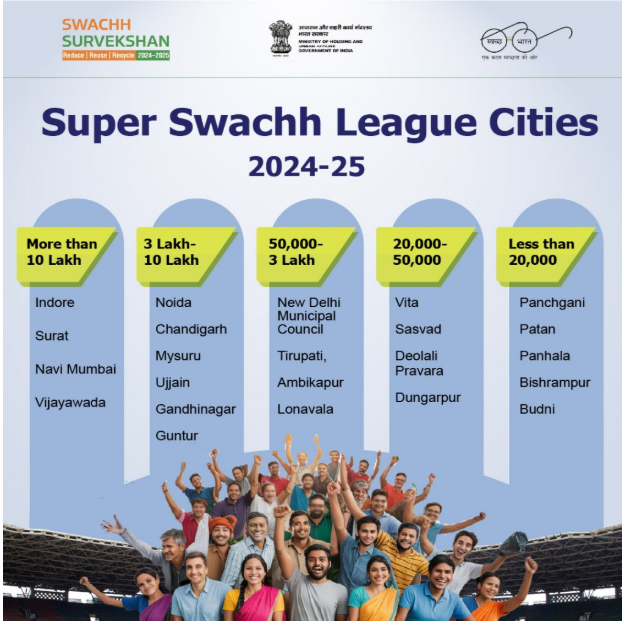
- 19 Jul 2025
In News:
Swachh Survekshan 2024–25, the world's largest urban sanitation survey, has marked a new milestone in India’s cleanliness journey under the Swachh Bharat Mission–Urban (SBM-U). Conducted by the Ministry of Housing and Urban Affairs (MoHUA), this 9th edition evaluated 4,500+ Urban Local Bodies (ULBs), reflecting deepened citizen engagement and growing competition among cities.
Key Highlights
- Cleanest Big City (10+ lakh population): Ahmedabad (Gujarat) ranked 1st for the first time, Bhopal (Madhya Pradesh), Surat (Gujarat).
- Swachh Bharat Super League 1.0: Introduced for cities with sustained performance—Indore, Surat, and Navi Mumbai led the league.
- Top Mid-Sized Cities (3–10 lakh): Mira-Bhayandar (1st), Bilaspur (2nd), Jamshedpur (3rd).
- Top Small Cities (<1 lakh): Sasvad (1st), Lonavala, Vita.
- Best Ganga Towns: Prayagraj, Varanasi, and Bijnor.
- Cleanest Cantonment: Secunderabad Cantonment Board.
- Best Performing States: Maharashtra, Madhya Pradesh, Chhattisgarh.
- Cleanest State Capital: Bhopal.
- Sanitation Worker Safety Awards: Visakhapatnam, Jabalpur, and Gorakhpur were recognised under SafaiMitra Surakshit Shehar.
Swachh Survekshan Framework
- Launched: 2016 under SBM-U.
- Objective: Foster competition among cities for sanitation and cleanliness.
- 2024–25 Innovations:
- One City, One Award principle for fair evaluation across population sizes.
- Super Swachh League: Honours cities with consistent top-tier performance.
- Real-time monitoring: Integrated Command and Control Centres (ICCCs) used for validation.
- Digital citizen engagement: Over 14 crore citizens participated via apps and feedback systems.
- 3R Emphasis: Focus on Reduce, Reuse, Recycle as a sustainability principle.
Super Swachh League (SSL)
- A newly created elite category within the survey.
- Aim: To promote continuous excellence in urban sanitation.
- Criteria:
- Minimum 3-star Garbage Free City (GFC) rating.
- Consistent top performance in waste management, segregation, ODF++ status, and citizen engagement.
- Population Brackets:
- 10 lakh+ (e.g., Ahmedabad, Indore, Surat)
- 3–10 lakh (e.g., Mysuru, Noida, Chandigarh)
- Below 3 lakh (with revised benchmarks)
Recognitions and Best Practices
- Waste-to-Wealth Initiatives: Recycled waste used to create artistic gifts for dignitaries.
- “Each One Clean One” Mentorship: Top 78 cities to mentor one lower-performing city each.
- Clean Kumbh Operations: Prayagraj efficiently managed waste during the Mahakumbh, which witnessed a footfall of 66 crore pilgrims.
- AI-Based Monitoring: Artificial intelligence tools deployed for cleanliness validation.
- Citizen-Centric Innovations: Apps and grievance portals boosted accountability.
Impact on Governance and Society
- Decentralised Sanitation Success: Cities like Bilaspur and Jamshedpur emerged as sanitation leaders.
- Inclusion of Smaller Towns: Simplified evaluation allowed small towns to compete on equal footing.
- Women & Youth Engagement: SHGs and youth campaigns played a major role in waste segregation drives.
- Job Creation & Entrepreneurship: Growth in green jobs and circular economy-based startups.
- Sanitation Worker Welfare: Greater focus on dignity, safety, and health of SafaiMitras.
Swachh Bharat Mission–Urban (SBM-U)
- Launched: October 2, 2014
- Phase II (SBM-U 2.0): Running from October 1, 2021 to 2026
- Goals:
- Eliminate open defecation
- Ensure 100% scientific waste management
- Make cities “Garbage-Free”
- Aligned with: India’s SDG 2030 goals and Viksit Bharat 2047 vision
Gujarat launches India’s First Tribal Genome Sequencing Project
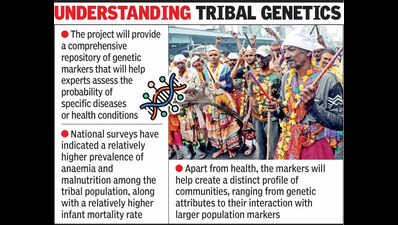
- 19 Jul 2025
In News:
Gujarat has become the first Indian state to launch a genome sequencing initiative specifically targeting tribal communities. The Tribal Genome Sequencing Project, announced in July 2025, aims to identify genetic health risks among tribal populations and develop precision healthcare strategies.
About the Project
- Name: Creation of Reference Genome Database for Tribal Population in Gujarat
- Launched by: Gujarat Biotechnology Research Centre (GBRC)
- Coverage: 2,000 individuals from tribal communities across 17 districts in Gujarat
- Budgetary Support: Part of the Gujarat State Budget 2025–26
Objectives
- Identify genetic risk markers for inherited disorders such as:
- Sickle cell anaemia
- Thalassaemia
- Hereditary cancers
- Develop personalised healthcare protocols tailored to tribal genetic profiles.
- Detect natural immunity markers to aid targeted medical interventions.
- Promote data-driven tribal health equity and science-led empowerment.
Key Features
- Establishes advanced infrastructure for:
- Sample collection
- Genome sequencing
- Genetic data interpretation
- Enables early detection and targeted treatment for genetically inherited diseases.
- Involves community engagement for inclusive participation and awareness.
- Represents diverse tribal groups, ensuring comprehensive genomic mapping.
Significance
- Healthcare Equity: Bridges the healthcare gap by enabling affordable, preventive, and precision medicine for marginalised tribal communities.
- Scientific Advancement: Provides a genomic reference database for long-term public health research and policy planning.
- Scalability: Sets a precedent for other Indian states to replicate region-specific genomic initiatives aimed at health inclusion.
What is Genome Sequencing?
- A genome is the complete set of DNA in an organism.
- Human DNA comprises 23 pairs of chromosomes, made up of millions of nucleotide bases: Adenine (A), Thymine (T), Guanine (G), Cytosine (C)
- Whole Genome Sequencing (WGS) decodes the exact sequence of these bases, helping identify genetic disorders and traits.
ADEETIE Scheme
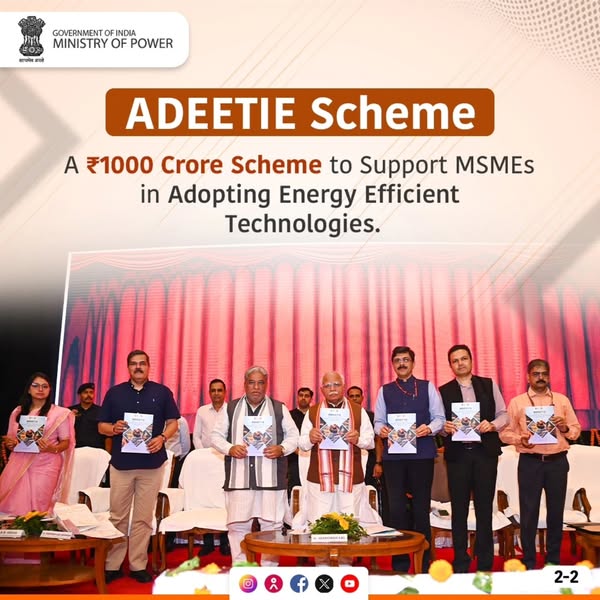
- 18 Jul 2025
In News:
The Ministry of Power launched the Assistance in Deploying Energy Efficient Technologies in Industries & Establishments (ADEETIE) scheme to promote energy efficiency in Micro, Small, and Medium Enterprises (MSMEs).
Key Details:
- Objective: To reduce energy consumption by 30–50%, enhance the power-to-product ratio, and facilitate the creation of green energy corridors in MSME industrial sectors.
- Implementing Agency:
- o Bureau of Energy Efficiency (BEE), under the Ministry of Power
- o Legislative backing: Energy Conservation Act, 2001
- Duration & Funding
- o Period: FY 2025–26 to 2027–28 (3 years)
- o Budgetary Outlay: ?1000 crore
- Target Beneficiaries
- Eligible Enterprises: MSMEs with Udyam ID
- Must demonstrate a minimum 10% energy savings using implemented technologies
- Sectoral Coverage: Targets 14 energy-intensive sectors, including: Brass, Bricks, Ceramics, Chemicals, Fisheries, Food Processing, etc.
- Implementation Strategy Phased Roll-out:
- Phase 1: 60 industrial clusters
- Phase 2: Additional 100 clusters
Scheme Components
|
Component |
Details |
|
Interest Subvention |
- 5% for Micro & Small Enterprises |
|
Technical Assistance |
- Investment Grade Energy Audits (IGEA) |
|
Financial Support |
- Incentives for adoption of efficient technologies |
Other BEE Initiatives for MSMEs
|
Initiative |
Purpose |
|
BEE-SME Programme |
Promote energy efficiency in MSMEs |
|
National Programme on Energy Efficiency & Technology Upgradation |
Modernize and reduce energy intensity |
|
SIDHIEE Portal |
Digital tool providing energy efficiency insights and handholding support |
Bureau of Energy Efficiency (BEE)
- The Government of India set up the Bureau of Energy Efficiency (BEE) on March 1, 2002 under the provisions of the Energy Conservation Act, 2001.
- The mission of the Bureau of Energy Efficiency is to assist in developing policies and strategies with a thrust on self-regulation and market principles, within the overall framework of the Energy Conservation Act, 2001 with the primary objective of reducing the energy intensity of the Indian economy.
- BEE coordinates with designated consumers, designated agencies and other organizations and recognises, identifies and utilises the existing resources and infrastructure, in performing the functions assigned to it under the Energy Conservation Act.
- The Energy Conservation Act provides for regulatory and promotional functions.
Prime Minister Professorships Scheme
- 18 Jul 2025
In News:
To strengthen India’s research and innovation ecosystem, the Anusandhan National Research Foundation (ANRF) has launched the Prime Minister Professorships under its flagship Promoting Advanced and Inclusive Research (PAIR) programme.
Objective
The scheme aims to:
- Utilize the expertise of retired scientists, industry professionals, and Professors of Practice
- Mentor faculty and students in State universities with emerging research ecosystems
- Address gaps in R&D capacity and promote globally competitive research
Key Features of the Prime Minister Professorship Scheme
|
Aspect |
Details |
|
Implementing Agency |
Anusandhan National Research Foundation (ANRF), under DST |
|
Eligibility |
- Superannuated scientists/faculty from reputed Indian/foreign institutions |
|
Host Institutions |
Category A State universities classified as spoke institutions under the PAIR programme |
|
Relocation Requirement |
Full-time presence at the host university is mandatory |
|
Tenure |
Up to 5 years, based on performance review |
|
Financial Support |
?30 lakh/year fellowship ?24 lakh/year research grant ?1 lakh/year overhead for host university |
|
Restrictions |
Cannot draw parallel fellowship/salary from other institutions; IP rights governed by host institution norms |
About PAIR Programme
|
Component |
Description |
|
Goal |
To foster inclusive, high-quality research in institutions with limited R&D capacity |
|
Hub Institutions |
Top 25 in NIRF rankings or Institutions of National Importance (within top 50) |
|
Spoke Institutions |
Central & State public universities, select NITs and IIITs |
|
Mentorship Ratio |
One hub can mentor up to 7 spoke institutions |
|
Participation Criteria |
|
Responsibilities of Selected Professors
- Mentor students and faculty for world-class research
- Guide establishment of labs and research facilities
- Promote interdisciplinary collaboration
- Facilitate industry-research linkages
- Provide 6-month internships at advanced labs or institutions
Significance for India’s R&D Ecosystem
- Addresses regional imbalance in research infrastructure
- Strengthens the research culture in State universities
- Enables structured national and international collaborations
- Promotes grassroots innovation and scientific leadership
India’s First Digital Nomad Village in Sikkim
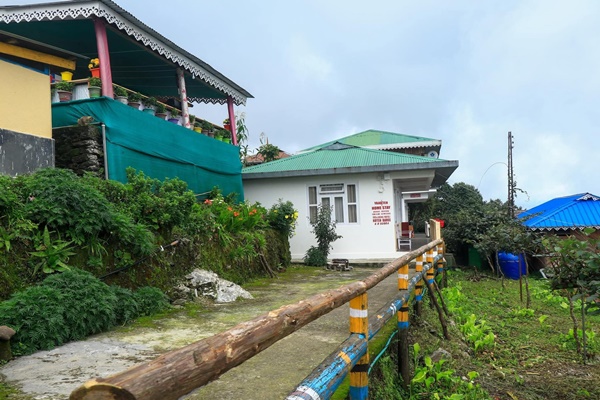
- 18 Jul 2025
In News:
Yakten, a village in Pakyong district, Sikkim, was officially declared India’s first Digital Nomad Village under the ‘Nomad Sikkim’ initiative.
Objective of the Initiative
- Transform strategic locations in Sikkim into year-round hubs for digital professionals from India and abroad.
- Ensure sustainable income for homestay owners during the lean tourism season (April–October).
- Promote sustainable tourism, remote work, and grassroots entrepreneurship.
Key Features:
|
Feature |
Details |
|
Connectivity |
Village-wide Wi-Fi, dual internet lines |
|
Electricity |
Inverters for uninterrupted power supply |
|
Eco-Initiatives |
Zero-waste management, eco-friendly practices |
|
Water Security |
Long-term solution planned under Jal Jeevan Mission |
|
Employment Focus |
Aligned with CM’s “One Family, One Entrepreneur” mission |
Who is a Digital Nomad?
A digital nomad is a person who uses technology to work remotely while traveling or residing in different locations, often in scenic or peaceful areas.
Implementation Partners
- District Administration (Pakyong)
- NGO Sarvahitey
Sikkim: A Pioneer in Sustainable Development
Sikkim holds the distinction of being:
- India’s first fully organic state (2016)
- First state to achieve 100% ODF status (2016)
- First to introduce organic aquaculture
Quantum Noise and Intraparticle Entanglement
- 18 Jul 2025
In News:
A collaborative study led by the Raman Research Institute (RRI), Bengaluru, in association with Indian and international institutions, has made a groundbreaking discovery: quantum noise, often seen as a disruptive factor in quantum systems, may facilitate or even revive quantum entanglement under specific conditions.
Key Scientific Concept: Quantum Entanglement
- Quantum Entanglement: A quantum phenomenon where particles remain interconnected such that the state of one particle instantly influences the state of another, regardless of distance.
- Intraparticle Entanglement: A lesser-known form of entanglement occurring between different properties (degrees of freedom) of a single particle, as opposed to interparticle entanglement (between two or more particles).
The Discovery
- Contrary to long-held assumptions, quantum noise, specifically amplitude damping, can:
- Revive lost intraparticle entanglement
- Generate entanglement in initially unentangled intraparticle systems
- In contrast, interparticle entanglement under similar noise conditions only decays without revival.
Types of Quantum Noise Studied
- Amplitude Damping: Simulates energy loss, akin to an excited state relaxing to a ground state.
- Phase Damping: Disrupts phase relationships, impacting quantum interference.
- Depolarizing Noise: Randomizes the quantum state in all directions.
- Key Finding: Intraparticle entanglement is more robust and less susceptible to decay across all three noise types.
- Scientific Tools Used
- Derived an analytical formula for concurrence (a measure of entanglement)
- Developed a geometric representation of how entanglement behaves under noise
Institutions Involved
- Raman Research Institute (RRI) – Lead Institute (Autonomous under DST)
- Indian Institute of Science (IISc)
- Indian Institute of Science Education and Research (IISER), Kolkata
- University of Calgary
- Funded by:
- India-Trento Programme on Advanced Research (ITPAR)
- National Quantum Mission (NQM), Department of Science and Technology (DST)
Applications and Significance
- Could lead to more stable and efficient quantum systems
- Implications for Quantum Communication and Quantum Computing
- Results are platform-independent (applicable to photons, trapped ions, neutrons)
- Provides a realistic noise model (Global Noise Model) for practical quantum technologies
Maglev Technology
- 18 Jul 2025
In News:
China has successfully tested magnetic levitation (Maglev) technology, potentially enabling trains to travel faster than aircraft.
What is Maglev Technology?
Magnetic Levitation (Maglev) is an advanced transportation technology that uses electromagnetic forces to levitate and propel trains without physical contact with the track. The train is lifted off the track using opposing magnetic fields, eliminating friction and enabling extremely smooth, silent, and high-speed travel.
Origin and Development
- Inventors: Robert Goddard (USA) and Emile Bachelet (French-American) first conceptualized maglevs in the early 1900s.
- Commercial Use: Maglev systems have been operational since 1984.
How Maglev Works
Maglev trains operate on three core principles:
- Levitation: Magnets lift the train above the guideway.
- Guidance: Electromagnets maintain lateral stability.
- Propulsion: Linear motors create magnetic fields that push/pull the train forward.
- The system involves superconducting magnets or electromagnets embedded in both the train and the track (guideway).
- Recent advancements include the use of high-temperature superconducting levitation and vacuum tubes, reducing air resistance and energy loss.
Recent Breakthrough: China's Supersonic Maglev
- Developed by: China Railway Rolling Stock Corporation (CRRC)
- Top Speed Achieved: 620+ mph (998+ km/h), faster than commercial aircraft (547–575 mph).
- Latest Test Site: Donghu Laboratory, Hubei Province, June 2024.
- A 1.1-ton train accelerated to 404 mph in under 7 seconds on a 1,968-foot track inside a vacuum tube.
- Design:
- Sleek, aerodynamic nose to reduce drag.
- Spacious interior with digital displays for passenger comfort.
Future Potential
- Travel Time Reduction:
- Beijing–Shanghai: From 5.5 hours (current high-speed rail) to 2.5 hours.
- Delhi–Kolkata (if implemented in India): Estimated to take under 2.5 hours for ~1,200 km.
- Ongoing Projects: Full-scale high-speed maglev tracks expected to be completed in China by end of 2025.
Key advantages of Maglev
|
Feature |
Benefits |
|
Speed |
Exceeds 600 km/h; faster than short-haul flights |
|
Efficiency |
Lower energy loss; high acceleration/deceleration capacity |
|
Eco-Friendliness |
Zero direct emissions; compatible with renewable energy |
|
Low Maintenance |
No physical contact = minimal wear & tear |
|
Passenger Comfort |
Silent ride with negligible vibration |
Behdeinkhlam Festival
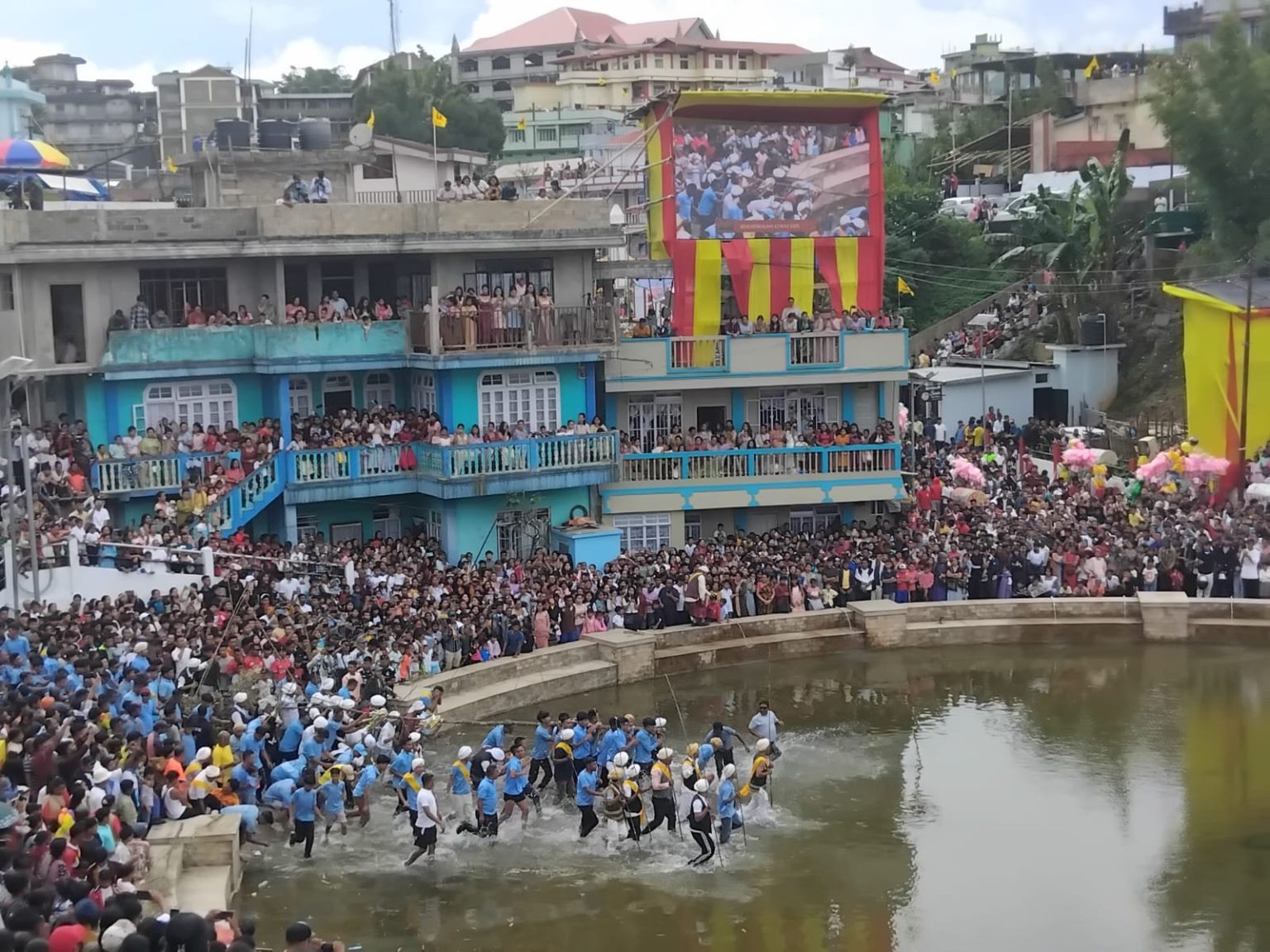
- 17 Jul 2025
In News:
The Behdeinkhlam Festival, a vibrant cultural and religious celebration of the Pnar community in Jowai, Meghalaya, was recently observed with great enthusiasm. Blending age-old indigenous rituals with contemporary social messages, the festival reflects the rich cultural heritage and evolving societal concerns of the Jaintia Hills region.
Etymology and Meaning
- The term “Behdeinkhlam” comes from the Pnar language:
- “Beh Dien” – to drive away with sticks or prayers.
- “Khlam” – refers to plague, pestilence, or disease.
- Thus, the name signifies a ritual expulsion of illness, evil spirits, and misfortune, historically associated with diseases like cholera.
Cultural and Religious Significance
- Primarily celebrated by the Pnars, a sub-tribe of the Jaintia community, the festival is a symbolic act of:
- Protecting society from disease.
- Invoking blessings for a bountiful harvest.
- Promoting community health, peace, and prosperity.
- It plays a crucial role in preserving the Niamtre faith, the indigenous religion of the Jaintia people, through intergenerational participation in ritual practices.
Timing and Duration
- Held annually in July, right after the sowing season, the festival lasts for three days.
- The timing is agriculturally significant, linking health rituals with hopes for a successful farming cycle.
Key Rituals and Celebrations
- Symbolic Rituals:
- Men go around beating the roofs of houses with bamboo poles to drive away evil spirits and symbolic disease.
- Tree trunks known as Dein Khlam and Khnong—rounded, straight, and polished—are brought from the forest and used in the main rituals.
- Community Processions:
- A sacred wooden post called Symbud Khnong is carried around the town and installed as a spiritual safeguard.
- Gender Roles in Rituals:
- Men perform dances, carry the sacred logs, and lead the processions.
- Women play a vital ceremonial role by preparing sacrificial food for ancestral spirits.
- Dance and Music: On the final day, the community gathers at Aitnar, where both young and old dance to the rhythmic beats of pipes and drums.
- Dad-Lawakor – Traditional Game: A unique football-like game called Dad-lawakor is played at Mynthong, showcasing indigenous sporting traditions and community bonding.
Contemporary Relevance
- In recent years, the festival has evolved to incorporate modern themes such as:
- Awareness against drug abuse
- Prevention of alcoholism
- Climate change consciousness
- These additions reflect a harmonious blending of tradition and modernity, where festivals serve both spiritual and civic functions.
Sierra Leone’s First UNESCO World Heritage Site
- 17 Jul 2025
In News:
In a landmark achievement for global environmental conservation, Sierra Leone has secured its first UNESCO World Heritage Site with the inscription of the Gola-Tiwai Complex, comprising the Tiwai Island Wildlife Sanctuary and the Gola Rainforest National Park (GRNP). This milestone is the result of over three decades of environmental activism led by Tommy Garnett, founder of the Environmental Foundation for Africa (EFA).
About the Gola-Tiwai World Heritage Site
Location
- Southern Sierra Leone, along the Moa River, near the Liberia border.
Components
- Tiwai Island Wildlife Sanctuary
- Area: Only 12 sq. km
- Biodiversity: Home to 11 primate species, including:
- Western Chimpanzee (endangered)
- Diana Monkey
- *King Colobus Monkey
- Serves as a biodiversity research hub and ecotourism destination in West Africa.
- Gola Rainforest National Park
- Sierra Leone’s largest tropical rainforest
- Biodiversity Highlights:
- Pygmy Hippopotamus
- Critically Endangered African Forest Elephant
- Numerous bird, insect, and plant species
- Provides critical services such as:
- Carbon sequestration
- Climate regulation
- Genetic biodiversity conservation
Ecological and Global Significance
- Biodiversity Hotspot: The Gola-Tiwai complex is one of the most biologically diverse areas in West Africa.
- Sustainable Development Model:
- Combines community engagement, scientific research, and eco-tourism.
- Sets a precedent for post-conflict environmental restoration.
- Global Climate Importance: The rainforest acts as a carbon sink, playing a role in mitigating climate change.
- Cultural-Ecological Linkages: Local communities depend on forests for livelihoods, traditions, and spiritual practices.
Geographical Context: Sierra Leone
Capital: Freetown
- Located on a peninsula with one of the world’s largest natural harbours.
Neighbouring Countries: Guinea (North and East), Liberia (Southeast), Atlantic Ocean (Southwest)
Key Geographical Features:
- Mountains:
- Mount Bintimani (Loma Mansa) – Highest peak at 1,948 m (6,391 ft)
- Tingi Hills, Sula Plateau, Kambui Schists
- Rivers:
- Major rivers: Moa, Sewa, Mano, Rokel
- Originate in Fouta Djallon highlands in Guinea
- Coastal Plains: Include mangrove swamps, lateritic soils, and seasonally flooded Bolilands
- Climate: Tropical with high rainfall and Harmattan winds in dry seasons
Natural Resources:
- Rich in diamonds, gold, rutile, and bauxite
- Economy based on mining and agriculture
Noctilucent Clouds
- 17 Jul 2025
In News:
Recently, rare noctilucent clouds were sighted over parts of Scotland, drawing attention due to their unique shimmering appearance in the night sky. These occurrences are significant in the context of climate studies and upper atmospheric science.
What are Noctilucent Clouds?
- Definition: Noctilucent clouds (NLCs), also known as polar mesospheric clouds, are high-altitude ice crystal clouds that appear thin, wispy, and glow with a blue or silvery hue after sunset.
- Etymology: The term “noctilucent” is derived from Latin—"nocto" (night) and "lucent" (shining)—meaning "night shining."
Atmospheric Location
- These are the highest clouds in Earth’s atmosphere, found in the mesosphere, around 76–85 km above the Earth's surface.
- In contrast, most other cloud types form in the troposphere, the lowest atmospheric layer.
Seasonal and Geographical Occurrence
- Seasonality:
- Northern Hemisphere: Visible from late May to early August, peaking during June and July.
- Southern Hemisphere: Much rarer; may appear from late November to early February, most commonly in December and January.
- Latitude Range: Typically occur between 45° and 80° latitude, both north and south of the equator.
- Visibility Conditions:
- Seen only during summer months, shortly after sunset or just before sunrise.
- The Sun remains just below the horizon, illuminating these high clouds from below, creating a glowing effect while the lower atmosphere is in darkness.
Formation Mechanism
- Composition: Made up of tiny ice crystals.
- Temperature Conditions: The mesosphere becomes extremely cold during summer, enabling the formation of ice on fine particles.
- Sources of Dust Nuclei:
- Natural: Micrometeorites, volcanic dust.
- Anthropogenic: Rocket exhaust particles and other upper-atmospheric pollutants.
- Optical Phenomenon: These ice crystals reflect sunlight even when the lower atmosphere is dark, giving them their luminous appearance.
Significance
- Serve as indicators of mesospheric conditions, especially temperature and humidity.
- Their increasing frequency and intensity in recent decades may be linked to climate change and human activities, including space exploration.
- Valuable for understanding upper atmospheric dynamics, particularly in the context of atmospheric chemistry and space weather.
Pradhan Mantri Divyasha Kendra (PMDK)
- 17 Jul 2025
In News:
The Union Ministry of Social Justice & Empowerment has recently inaugurated the 75th Pradhan Mantri Divyasha Kendra (PMDK) at the Government Medical College, Badaun, Uttar Pradesh, marking a significant milestone in India's efforts toward inclusive social welfare.
About PMDK
The Pradhan Mantri Divyasha Kendra (PMDK) is a flagship initiative of the Government of India aimed at delivering integrated rehabilitation and assistive services under one roof. It caters primarily to:
- Persons with Disabilities (Divyangjan), as identified under the Rights of Persons with Disabilities Act, 2016.
- Senior Citizens, especially those from economically weaker sections (EWS).
These centres offer comprehensive services including:
- Assessment and evaluation
- Counselling
- Distribution of assistive devices
- Post-distribution follow-up care
Institutional Framework
PMDKs operate under the aegis of the Ministry of Social Justice & Empowerment, and are implemented by the Artificial Limbs Manufacturing Corporation of India (ALIMCO), a Central Public Sector Undertaking under the Department of Empowerment of Persons with Disabilities (DEPwD).
Schemes Implemented through PMDKs
- Assistance to Disabled Persons for Purchase/Fitting of Aids and Appliances (ADIP Scheme): Aims to assist Divyangjan with suitable, durable, and scientifically manufactured aids and appliances.
- Rashtriya Vayoshri Yojana (RVY): Focuses on providing free-of-cost assistive devices to senior citizens from BPL or economically weaker backgrounds.
Beneficiary-Oriented Impact
- With the inauguration of the latest centre in Badaun, the total number of operational PMDKs in the country has reached 75.
- These centres have collectively benefited over 1.4 lakh individuals, distributing assistive devices worth ?179.15 lakh.
- Devices offered include:
- Tricycles, wheelchairs, walkers
- Hearing aids and artificial limbs
- Other mobility and sensory support equipment
Significance and Relevance
The PMDK initiative plays a crucial role in addressing the accessibility gap in health and welfare services for Divyangjan and elderly citizens. By establishing these centres at regional medical hubs, the government is:
- Reducing the travel burden and logistical challenges for beneficiaries.
- Ensuring dignified, timely, and localised support.
- Strengthening the implementation of constitutional and legal mandates under Articles 41 and 46, which call for state support to the vulnerable sections of society.
Machilipatnam
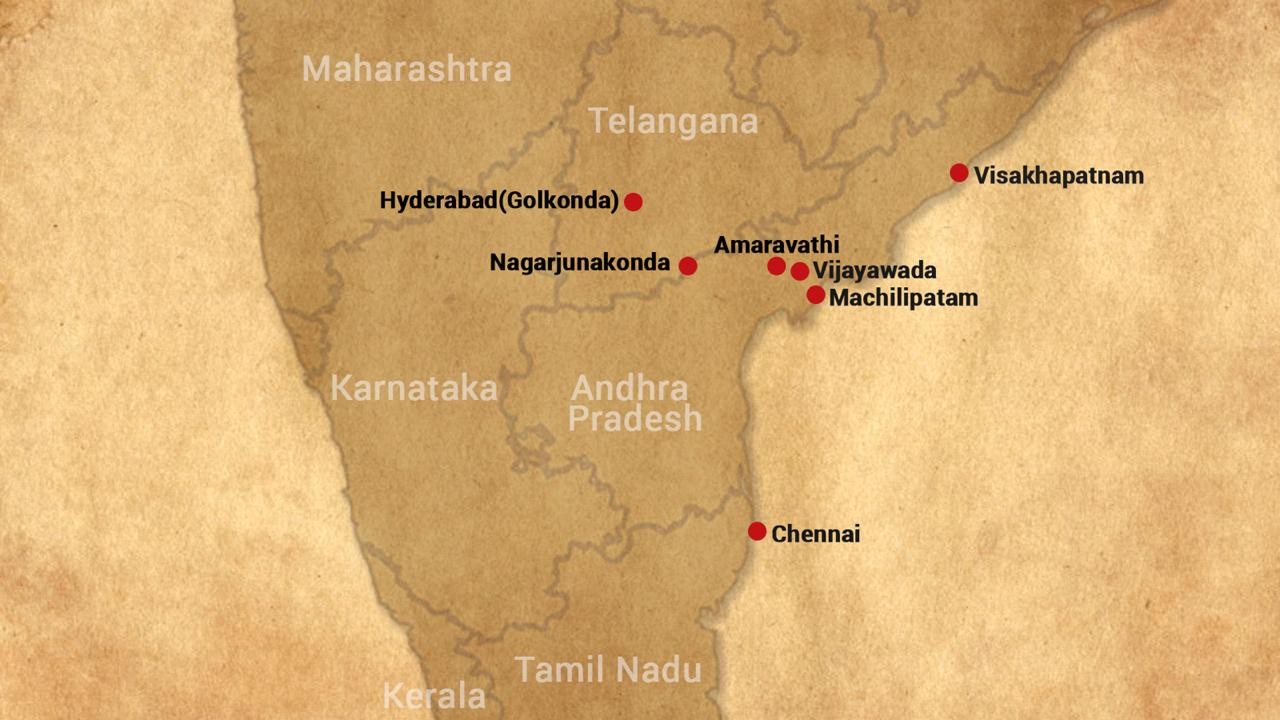
- 17 Jul 2025
In News:
Located at the confluence of the Krishna River and the Bay of Bengal, Machilipatnam—historically known as Masulipatnam—is a port town with a rich maritime legacy. Once a prominent node in ancient and medieval trade networks, the town is now experiencing renewed attention and developmental revival.
Ancient Maritime Significance
- Known in classical sources such as the Periplus of the Erythraean Sea (1st century CE) as Maisolos, Machilipatnam played a crucial role in early Indian Ocean trade.
- Its strategic position on the Coromandel Coast made it a conduit for commercial exchange between the Deccan Plateau and distant civilizations, including Rome, the Arab world, and Southeast Asia.
- Archaeological and literary evidence points to Machilipatnam's role as a trans-shipment point for goods like spices, textiles, and pearls.
Flourishing Under the Satavahanas (1st BCE – 3rd CE)
- During the reign of the Satavahana dynasty, the port witnessed significant expansion.
- It became renowned for the export of fine muslin fabrics, precious stones, and aromatic goods.
- Inland trade links with Amaravati and Dharanikota—important urban and Buddhist centres—further enhanced the port’s economic significance.
Medieval Resurgence and Colonial Trade
- From the 16th to 18th centuries, the port was revitalized under the Golconda Sultanate.
- It emerged as a hub for European maritime powers such as the Dutch, British, and French East India Companies.
- Despite its early importance, Machilipatnam’s influence declined in the 18th century when colonial powers shifted their focus to Madras (now Chennai), which offered better access and facilities for long-distance trade.
Port Cities in Indian Maritime History
The historical prominence of Machilipatnam can be viewed in the broader context of ancient Indian port cities:
|
Port City |
Region/Modern State |
Period/Dynasty |
|
Lothal |
Gujarat |
Indus Valley Civilization |
|
Arikamedu |
Puducherry |
Cholas, Early Tamil Kingdoms |
|
Kaveripattinam |
Tamil Nadu |
Cholas |
|
Sopara |
Maharashtra |
Satavahanas |
|
Tamralipta |
West Bengal |
Mauryas and Guptas |
|
Barygaza |
Bharuch, Gujarat |
Indo-Greek and Kushan Periods |
These ports collectively illustrate India’s extensive maritime interactions across time, with Machilipatnam serving as a significant node in this network during multiple historical phases.
Contemporary Relevance
- Recent efforts to revitalize Machilipatnam’s port infrastructure are aimed at restoring its economic utility and cultural relevance.
- Its historical importance makes it a potential candidate for heritage tourism, as well as a case study in urban renewal based on historical identity.
RhoDIS India
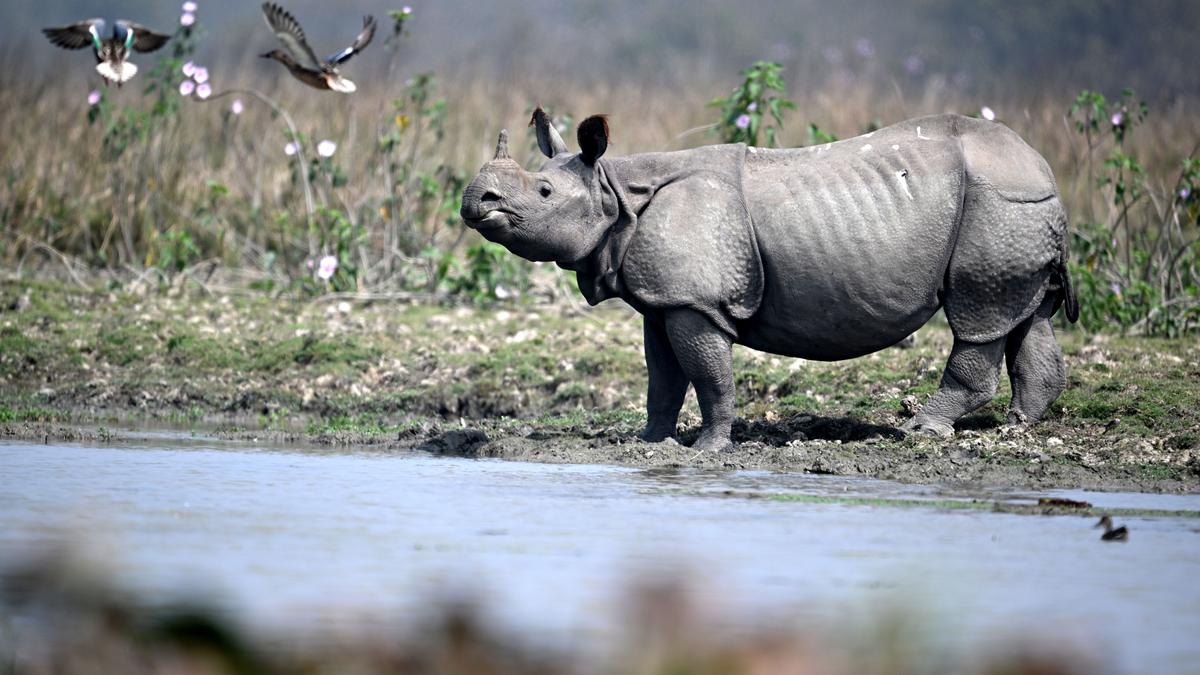
- 16 Jul 2025
In News:
A specialised team has begun the genetic analysis of 2,573 rhino horn samples in India, with the goal of enhancing rhino conservation and curbing wildlife crimes. This is part of the RhoDIS India (Rhino DNA Index System) initiative.
About RhoDIS India Programme:
- Launched in 2016 by the Ministry of Environment, Forest and Climate Change (MoEFCC) in collaboration with:
- Wildlife Institute of India (WII), Dehradun
- State forest departments of Assam, West Bengal, and Uttar Pradesh
- WWF India
- Objective:
To create a DNA database of individual rhinos for:- Aiding wildlife crime investigations
- Supporting scientific management of the rhino population
- Implementation:
The genetic lab at WII Dehradun handles DNA profiling using a standardised protocol approved by the MoEFCC. It involves short tandem repeat (STR) allele analysis for generating unique genetic signatures for each rhino.
Recent Developments in Assam:
- In September 2021, the Assam Forest Department verified and destroyed 2,479 rhino horns stored in state treasuries, excluding horns under court cases or of special scientific interest.
- Prior to destruction, tiny samples from 2,573 horns were preserved for DNA and chemical analysis. These samples have now been repackaged and transported to WII for genetic sequencing.
- This analysis will help track temporal genetic changes and improve understanding of the rhino population’s genetic health across Assam.
- The entire repackaging process was recorded and monitored by independent experts to ensure transparency.
Significance of RhoDIS:
- Provides individual identification of rhinos from horn samples, helping track poaching incidents and illegal wildlife trade.
- Strengthens forensic evidence in courts related to wildlife crime.
- Assists in population management through genetic diversity assessments.
What is a Rhino Horn?
- Composed of keratin, the same protein found in human nails and horse hooves.
- Contains sulphur-rich amino acids like cysteine, and minerals such as calcium carbonate and phosphate.
- Greater one-horned rhinos (found in India) have a single horn, unlike African species with two.
Jarawa Tribe
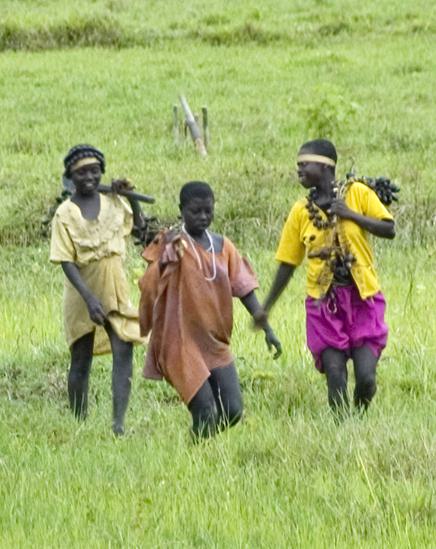
- 16 Jul 2025
In News:
The 16th Census of India, scheduled for 2026–27, will include a special effort to enumerate the six main indigenous tribes of the Andaman and Nicobar Islands, including the Jarawa, one of the world’s oldest surviving tribal groups.
About the Jarawa Tribe:
- Status: Recognized as a Particularly Vulnerable Tribal Group (PVTG).
- Location: Reside in Middle and South Andaman Islands, primarily in dense tropical forests and coastal zones.
- Lifestyle:
- Nomadic hunter-gatherers living in small groups of 40–50.
- Depend on forest produce, marine fishing, and traditional medicine.
- Exhibit robust health, with low incidence of lifestyle diseases.
- Cultural Characteristics:
- Minimal attire suited to the climate.
- Known for strong territorial identity and historical resistance to outsiders.
- Maintain a natural diet and traditional healing practices.
Population Trends:
- 1998 Estimate: ~260 individuals (based on limited contact).
- 2011 Census: 380 individuals (out of 28,530 STs in A&N Islands).
- 2025 Official Estimate: 647 individuals.
- Increase attributed to improved healthcare, trust-building, and non-intrusive welfare policies.
Government Interventions & Welfare Initiatives:
- Healthcare: Preventive medical support (measles, hepatitis, malaria) provided without interfering in traditional practices.
- Welfare Access: Increased interaction since 1998 has enabled better outreach, aiding accurate population tracking.
- PM-JANMAN Scheme: Under the Pradhan Mantri Janjati Adivasi Nyaya Maha Abhiyan, 191 PVTG individuals have been identified in the islands for targeted welfare.
Challenges & Ethical Considerations:
- Andaman Trunk Road (ATR): Provides physical access but raises concerns of cultural intrusion.
- Expert Opinion: Minimum intervention is essential for preserving the Jarawa way of life. Trust and respect for autonomy remain key.
16th Census of India: Timeline & Relevance:
- Reference Dates:
- October 1, 2026: Snow-bound areas (e.g., Ladakh, A&N Islands).
- March 1, 2027: Rest of India.
- Special Feature: Will include caste enumeration, the first since 1931.
- Jarawa Inclusion: Officials expect smooth access to PVTGs like the Jarawas due to longstanding trust and contact.
Exercise Talisman Sabre 2025
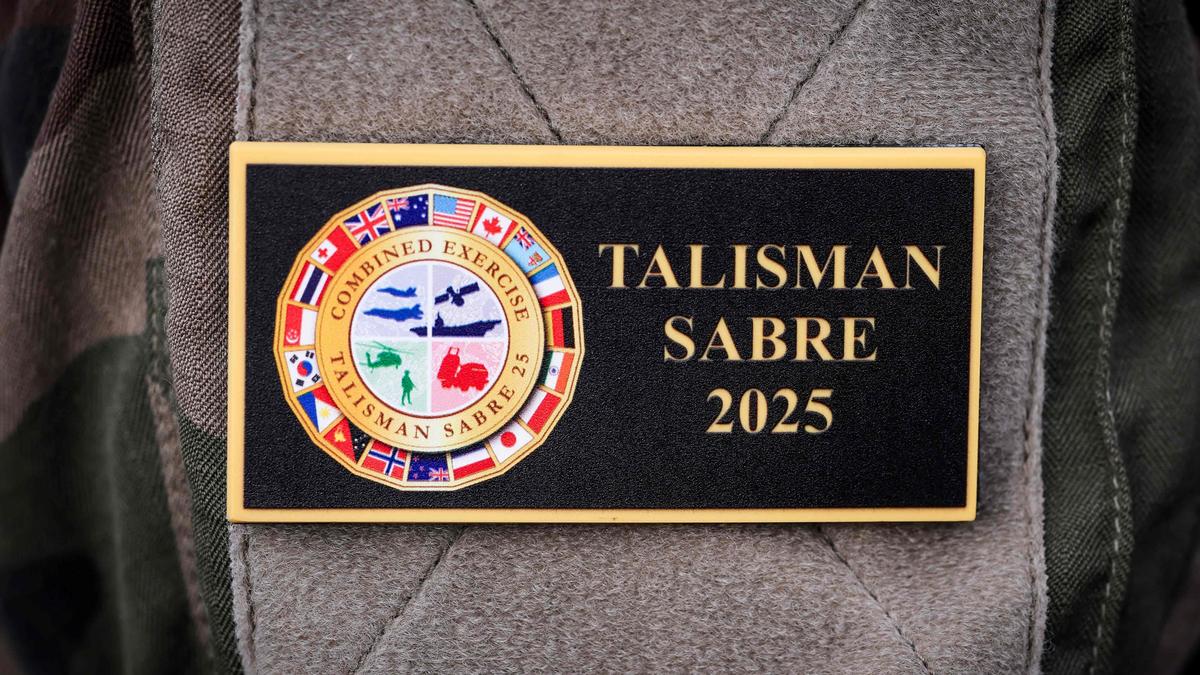
- 16 Jul 2025
In News:
India is participating in Exercise Talisman Sabre 2025, a major multinational military exercise led by Australia and the United States, now in its 11th edition. The exercise commenced on July 13, 2025, and includes over 35,000 military personnel from 19 nations.
About Exercise Talisman Sabre:
- Origin & Nature:
- A biennial bilateral military exercise between Australia and the United States since 2005.
- Designed to promote a free and open Indo-Pacific and strengthen interoperability and strategic partnerships among allies.
- Multinational Participation (2025):
- Participants: Australia, United States, India, Canada, Fiji, France, Germany, Indonesia, Japan, Netherlands, New Zealand, Norway, Papua New Guinea, Philippines, Republic of Korea, Singapore, Thailand, Tonga, United Kingdom.
- Observers: Malaysia and Vietnam.
- Geographical Scope: Exercises are being conducted across Queensland, Northern Territory, Western Australia, New South Wales, Christmas Island, and for the first time, in Papua New Guinea (outside Australian territory).
Significance for India and the Indo-Pacific:
- Strengthens India's defence diplomacy and military interoperability with Indo-Pacific allies.
- Reinforces commitment to collective security and rules-based international order.
- Enhances India's operational exposure in multidomain warfighting scenarios alongside major powers.
Who is an ‘Ordinarily Resident’?
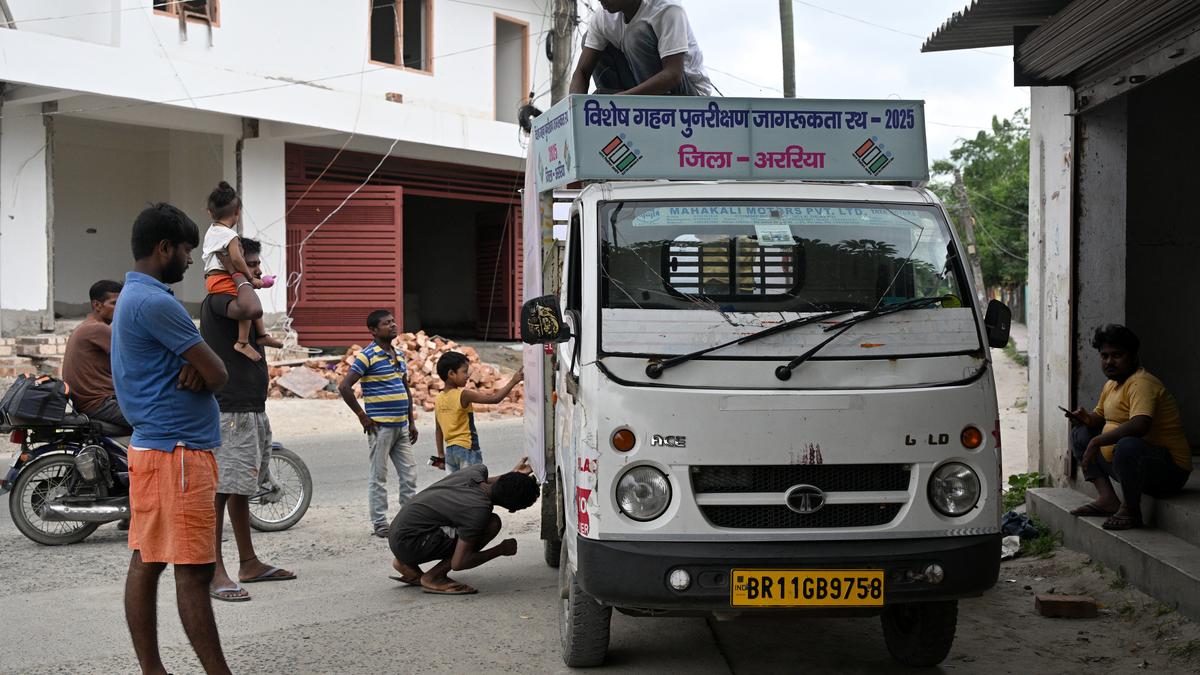
- 16 Jul 2025
In News:
The Election Commission of India (ECI) has initiated a Special Intensive Revision (SIR) of electoral rolls in Bihar, sparking debate over the eligibility of migrant workers and the interpretation of ‘ordinarily resident’ under electoral law.
Legal Basis of ‘Ordinarily Resident’
- Representation of the People Act, 1950:
- Section 19: Only persons ordinarily resident in a constituency are eligible for enrolment in its electoral roll.
- Section 20: Defines ‘ordinarily resident’ and clarifies that:
- Ownership or possession of a house alone does not qualify one as ordinarily resident.
- A person temporarily absent from their usual place of residence (due to work, travel, etc.) continues to be ordinarily resident there.
- Certain categories are deemed to be ordinarily resident in their home constituency even if posted elsewhere:
- Members of armed forces,
- State police serving outside their State,
- Central government employees posted abroad,
- Persons holding constitutional offices declared by the President in consultation with the ECI,
- Their spouses are also covered.
- Section 20A (added in 2010):
- Allows Non-Resident Indians (NRIs) to register and vote from the address mentioned in their passport, even if they reside abroad long-term.
Rules Governing Electoral Rolls
- The Registration of Electors Rules, 1960 (RER):
- Notified by the Central Government in consultation with the ECI.
- Govern the preparation, revision, and correction of electoral rolls.
- Electoral Registration Officers apply and verify the concept of ‘ordinarily resident’ during the enrolment process.
Judicial Interpretation
- Gauhati High Court (Manmohan Singh Case, 1999):
- Defined ‘ordinarily resident’ as one who is habitually and permanently living in a place.
- The person must intend to reside there, and society must reasonably accept them as a resident.
3I/Atlas: Third Interstellar Object Discovered
- 16 Jul 2025
In News:
Scientists have confirmed the discovery of 3I/Atlas, the third-known interstellar object, which could be over 7 billion years old — predating the Solar System by nearly 3 billion years. It was detected on July 1, 2025, by the Asteroid Terrestrial-impact Last Alert System (ATLAS) telescope in Río Hurtado, Chile.
Key Features:
- Interstellar Origin: 3I/Atlas is not gravitationally bound to the Sun and follows a hyperbolic trajectory, indicating it entered the Solar System from interstellar space.
- High Speed: It is traveling at approximately 60 km/s — too fast to be retained by the Sun’s gravity at a distance of 670 million km from the Sun.
- Current Location: The object is now roughly 917 million km from Earth, close to the orbit of Jupiter.
- Age Estimation: Estimated to be around 7 billion years old, making it potentially the oldest comet ever observed.
Understanding Interstellar Objects
- Definition: Interstellar objects are celestial bodies that originate outside the Solar System and pass through it without being gravitationally bound to the Sun.
- Known Interstellar Objects:
- 1I/?Oumuamua (2017)
- 2I/Borisov (2019)
- 3I/Atlas (2025)
How do scientists confirm Interstellar Origin?
- Trajectory Analysis: Objects within the Solar System follow closed elliptical orbits. Interstellar objects exhibit open hyperbolic orbits — they have a perihelion (closest point to the Sun) but no aphelion (no return).
- Velocity Measurement: A high velocity at a great distance from the Sun, such as with 3I/Atlas, suggests that the object was not accelerated within our Solar System and must have originated externally.
- Example: At 670 million km from the Sun, 3I/Atlas’s speed of 60 km/s indicates a hyperbolic escape path, unaffected significantly by the Sun’s gravitational pull.
Why is it Significant?
- Clues to Alien Planetary Systems: The chemical composition of interstellar objects offers insights into the formation conditions of other star systems.
- Rare Opportunity: These objects provide a direct sample of exoplanetary material, potentially long before space missions can reach other star systems.
- Scientific Value: If rich in ices, as expected in long-distance comets, it implies ejection from a cold, outer region of a distant planetary system—likely influenced by large planets like Jupiter or Neptune analogues.
e-Truck Incentive Scheme
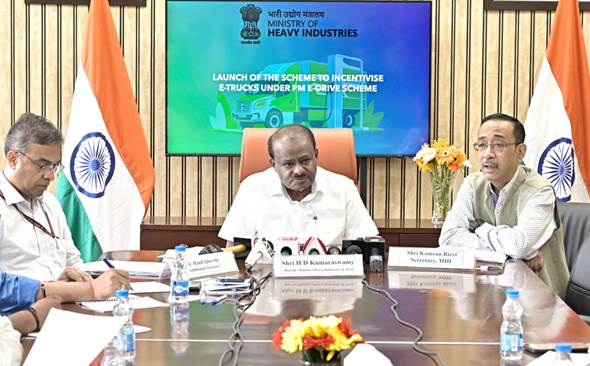
- 15 Jul 2025
In News:
The Government of India, under the PM E-DRIVE initiative, has launched the country’s first dedicated financial incentive scheme for electric trucks (e-trucks). Spearheaded by the Ministry of Heavy Industries (MHI) and launched by Union Minister H.D. Kumaraswamy, the initiative is a key component of India's push toward green freight mobility, net-zero emissions by 2070, and cleaner urban air quality.
Key Features of the Scheme
- Scope & Objective: Aimed at reducing emissions from the freight sector, lowering logistics costs, and encouraging indigenous e-truck manufacturing under Atmanirbhar Bharat.
- Target Vehicle Categories:
- N2 Category: Trucks with Gross Vehicle Weight (GVW) between 3.5 to 12 tonnes
- N3 Category: Trucks with GVW above 12 tonnes and up to 55 tonnes (In case of articulated vehicles, only the N3-category puller tractor is eligible.)
- Eligibility Conditions:
- Mandatory scrapping of old diesel trucks for availing incentives
- Battery warranty: 5 years or 5 lakh km
- Vehicle and motor warranty: 5 years or 2.5 lakh km
- Incentives Structure:
- Maximum incentive: ?9.6 lakh per e-truck
- Incentive amount based on GVW
- Disbursal: Upfront reduction in purchase price; reimbursed to OEMs via PM E-DRIVE portal (first-come, first-served)
Implementation Timeline and Financial Outlay
- Duration: October 1, 2024 – March 31, 2026
- Budget:
- ?500 crore earmarked for e-trucks within an overall outlay of ?10,900 crore under PM E-DRIVE
- Dedicated ?100 crore allocation for 1,100 e-trucks registered in Delhi to combat air pollution
Wider PM E-DRIVE Ecosystem (formerly EMPS-2024)
- EV Categories Covered:
- Electric 2-Wheelers: Incentive of ?5,000/kWh (capped at ?10,000 in Year 1, ?5,000 in Year 2)
- Electric 3-Wheelers: ?25,000 in Year 1, ?12,500 in Year 2
- L5 Cargo EVs: ?50,000 in Year 1, ?25,000 in Year 2
- E-buses and e-ambulances: Covered under future extensions
- e-Vouchers: Introduced for digital verification and incentive tracking. One vehicle per Aadhaar; required for OEM reimbursement.
- Charging Infrastructure: The scheme promotes setting up EV Public Charging Stations (EVPCS) in high EV penetration cities and along major highways.
Strategic Importance and Impact
- Environmental: Diesel trucks constitute only 3% of the vehicle fleet but contribute to 42% of transport-related GHG emissions.
- Deployment Goal: Support for 5,600 e-trucks across India
- Sectoral Focus: Logistics, cement, steel, and port sectors
- Industry Participation: OEMs like Tata Motors, Ashok Leyland, Volvo Eicher are actively engaged
- CPSE Involvement: SAIL to procure 150 e-trucks and electrify 15% of hired vehicles.
Sanchar Mitra Scheme
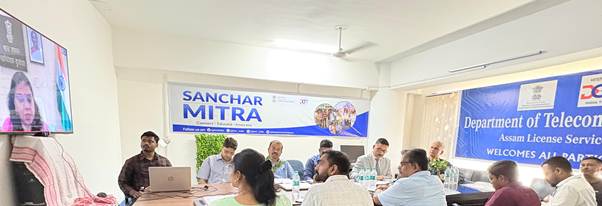
- 15 Jul 2025
In News:
The Sanchar Mitra Scheme, launched by the Department of Telecommunications (DoT), Ministry of Communications, is a nationwide volunteer-based initiative aimed at promoting digital literacy, telecom safety, and cybersecurity awareness among citizens.
Initially piloted in select institutions, the scheme has now been scaled up nationally due to its successful outreach and impact.
Key Highlights:
- Who are Sanchar Mitras?
- Selected university student volunteers from streams such as telecom, electronics, computer science, and cybersecurity who act as digital ambassadors to spread awareness at the grassroots level.
- Core Objectives:
- Promote digital safety and cyber hygiene
- Raise awareness on cyber frauds, EMF radiation concerns, and responsible mobile usage
- Bridge the communication gap between telecom services and citizens
- Training & Exposure: Sanchar Mitras receive specialized training from:
- National Communications Academy–Technology (NCA-T)
- DoT Media Wing: Training covers topics such as 5G, 6G, Artificial Intelligence, Cybersecurity, and telecom technologies.
- Community Engagement: Volunteers organize awareness campaigns, collaborate with NGOs, and engage in door-to-door outreach to promote informed digital behavior.
- Assessment & Incentives: Participants are evaluated on innovation, consistency, and outreach impact. Top performers receive:
- Internship opportunities
- Involvement in national telecom projects
- Invitations to forums like the India Mobile Congress
- Participation in International Telecommunication Union (ITU) events
Recent Developments:
- The first expanded rollout was initiated in Assam, where DoT partnered with 18 top engineering institutions including IIT, IIIT, and NIT.
- Chaired by senior DoT officials, sessions in BSNL Bhawan, Guwahati, introduced the scheme and invited collaboration from academic institutions.
Significance for India:
- Digital Inclusion: Empowers citizens to participate securely in the digital ecosystem.
- Youth Engagement: Mobilizes Yuva Shakti as a force for nation-building and technological awareness.
- Cybersecurity Shield: Acts as a grassroots defense against increasing cyber threats and misinformation.
- Alignment with National Priorities: Supports India’s vision of leadership in the 4 Ds – Democracy, Demography, Digitization, and Delivery.
Astra Missile
- 15 Jul 2025
In News:
The Astra missile, developed by the Defence Research and Development Organisation (DRDO), is India’s first indigenous Beyond-Visual-Range Air-to-Air Missile (BVRAAM). Recently, the Indian Air Force (IAF) and DRDO successfully flight-tested the missile from a Sukhoi-30 MKI fighter jet off the coast of Odisha.
Key Features:
- Range: Over 100 km, enabling engagement of distant aerial targets.
- Speed: Capable of flying at speeds exceeding Mach 4.
- Operational Ceiling: Effective up to 20 km altitude.
- Seeker: Equipped with a fully indigenous Radio Frequency (RF) Seeker, enhancing precision targeting.
- Guidance System: State-of-the-art navigation and guidance technologies ensure high accuracy.
- All-weather Capability: Operable in day and night across diverse weather conditions.
Recent Tests:
- Conducted against high-speed unmanned aerial targets at varying ranges and conditions.
- Achieved pinpoint accuracy in both launches.
- All subsystems, including the RF seeker and tracking systems, functioned flawlessly.
- Tests were conducted at the Integrated Test Range (ITR), Chandipur.
Strategic Significance:
- Boosts India’s air-to-air combat capability.
- Reduces dependency on foreign missile systems.
- Supports the vision of Aatmanirbhar Bharat in defence technology.
- Over 50 Indian public and private sector industries, including Hindustan Aeronautics Limited (HAL), contributed to its development.
Lake Turkana Basin
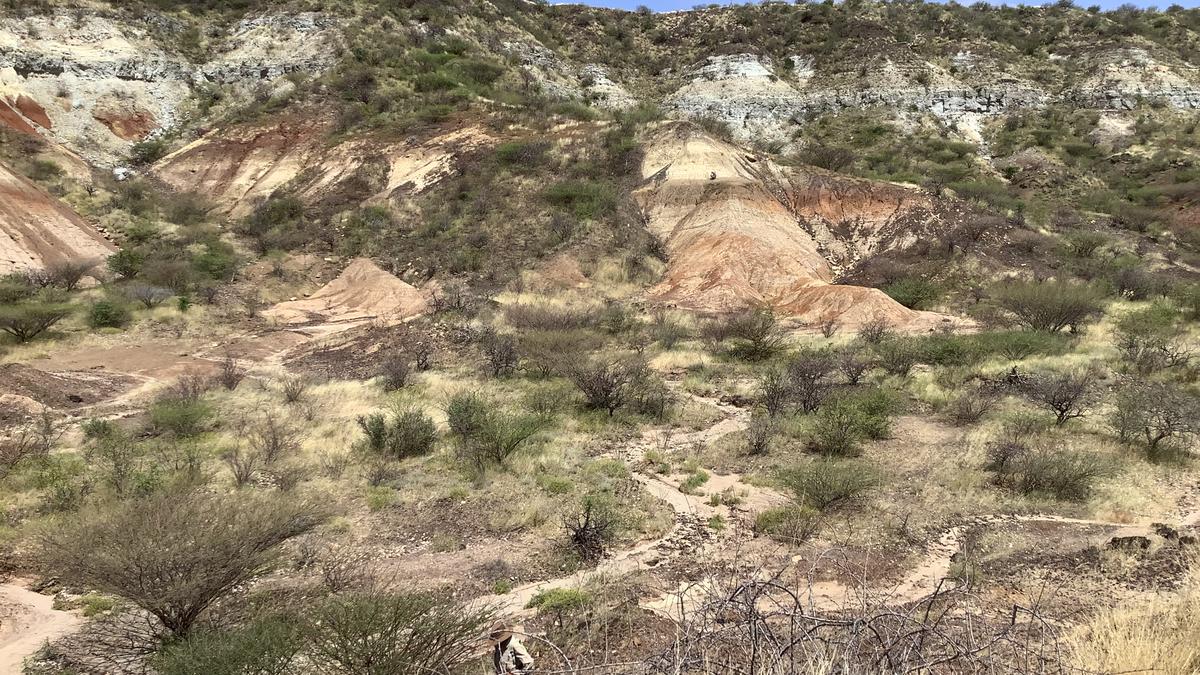
- 15 Jul 2025
In News:
For the first time, scientists have successfully extracted and analyzed 18–24 million-year-old enamel proteins from extinct mammal fossils—pushing the frontiers of biomolecular preservation and reshaping our understanding of mammalian evolution. The groundbreaking findings were published in Nature (July 2025) and draw from fossils found in Lake Turkana Basin (Kenya) and the Haughton Impact Crater (Canada's High Arctic).
Key Highlights:
What was Discovered?
- Enamel proteins, trapped in the dense tooth enamel of extinct mammals, were recovered from fossils dating back 18–24 million years.
- These proteins are now the oldest biomolecular sequences ever recovered, exceeding the time limits of ancient DNA (which typically degrades within 1 million years).
Significance of Enamel Proteins:
- Enamel—being the hardest biological substance—acts as a molecular vault, shielding proteins from environmental degradation.
- These ancient proteins provide crucial phylogenetic information, even in hot tropical zones like Lake Turkana, where preservation was previously thought improbable.
Methodology:
- Researchers extracted structural enamel proteins like amelogenin, enamelin, and ameloblastin.
- Advanced mass spectrometry and rigorous contamination controls ensured data integrity.
- Over 1,000 peptides and 7 different enamel proteins were recovered from a 21–24 million-year-old rhinoceros tooth in the Arctic.
- Diagenetic alterations (e.g., oxidation, glycation) were used as authenticity markers.
Site-Wise Discoveries:
Lake Turkana Basin (Kenya):
- Fossils from a hot, arid region yielded enamel proteins up to 18 million years old.
- Demonstrated exceptional preservation due to fluviodeltaic sedimentation, which allowed rapid burial and protection from oxygen and heat.
- The Turkana Basin is a major palaeontological site in Eastern Rift Valley and home to species like proboscideans, rhinocerotids, hippopotamids, and hominoids.
- Enamel samples ranged from 1.5 to 29 million years old.
- Turkana Lake, the world’s largest permanent desert lake and a UNESCO World Heritage Site, lies in this region.
Haughton Impact Crater (Nunavut, Canada):
- Ancient enamel from a permafrost site enabled recovery of 21–24 million-year-old proteins.
- The site was once a temperate lake, aiding preservation under low oxygen (anoxic) conditions.
- Researchers reconstructed rhinocerotid evolution, showing Epiaceratherium diverged before the Elasmotheriinae-Rhinocerotinae split, revising long-held fossil-based phylogenies.
Scientific Implications:
|
Aspect |
Enamel Proteins |
Ancient DNA |
|
Age limit |
>20 million years |
<1 million years |
|
Preservation |
High in enamel |
Poor in hot climates |
|
Resolution |
Useful for deep-time splits |
High for closely related species |
|
Data Type |
Protein sequence |
Genetic sequence |
|
Application |
Tree of life reconstruction, evolutionary history |
Genome mapping, ancestry |
Agricultural Monitoring and Event Detection (AMED) API
- 15 Jul 2025
In News:
Google has introduced a set of artificial intelligence (AI)-based innovations to advance India’s agricultural practices and enhance the cultural and linguistic relevance of global AI models.
Agricultural Monitoring and Event Detection (AMED) API
- Launched by: Google DeepMind and Google’s Partnerships Innovation Team
- Collaborators: TerraStack, IIT-Kharagpur, and other local partners
- Foundation: Built on the Agricultural Landscape Understanding (ALU) API launched in 2023
- Key Features:
- AI-Based Field Monitoring: Offers field-level insights using satellite imagery and deep learning to monitor crops and agricultural activity.
- Crop-Specific Data: Provides details on crop type, season, field size, and three years of historical cropping and land-use data.
- Event Detection: Detects agricultural changes at individual field levels, improving yield prediction and input management.
- Biweekly Updates: Data refreshed every two weeks to ensure real-time agricultural monitoring.
- Open Access for Innovation: Available for integration by agri-tech startups, financial institutions, and government bodies to support data-backed rural lending, climate adaptation, and sustainable farming practices.
- Objectives and Utility:
- Empower agriculture stakeholders with granular, real-time intelligence.
- Facilitate precision agriculture by tailoring support for soil, water, and climatic needs.
- Strengthen India's resilience to climate-related risks and promote informed policymaking.
- Help financial services design location-specific rural credit systems.
Amplify Initiative: Cultural and Linguistic Localization of AI
Google is also working to enrich AI systems with deeper understanding of India’s diversity through the Amplify Initiative, piloted earlier in Sub-Saharan Africa.
Indian Collaboration:
- Partner Institution: IIT-Kharagpur
- Goal: Create hyperlocal annotated datasets in multiple Indic languages related to healthcare, safety, and social issues.
- Aims to ensure that Large Language Models (LLMs) are better aligned with India’s cultural plurality and linguistic complexity.
Global Impact:
- Builds on success in Africa, where 8,000+ queries in 7 languages were developed by 155 experts to address issues such as chronic illness and misinformation.
INS Nistar

- 14 Jul 2025
In News:
In a significant stride towards self-reliance in defence manufacturing under the Aatmanirbhar Bharat initiative, the Indian Navy has inducted INS Nistar, its first indigenously designed and built Diving Support Vessel (DSV). Developed by Hindustan Shipyard Limited (HSL), Visakhapatnam, INS Nistar enhances India’s capabilities in deep-sea rescue, submarine emergency response, and underwater operations, placing India among a select group of nations with such advanced maritime assets.
Key Features and Capabilities
- Size and Endurance:
- Length: ~118–120 meters
- Displacement: Over 10,000 tonnes
- Endurance: Capable of operating for over 60 days at sea
- Diving and Rescue Capabilities:
- Equipped for saturation diving up to 300 meters and side diving stage operations up to 75 meters
- Integrated with Remotely Operated Vehicles (ROVs) for diver monitoring and salvage missions up to 1000 meters below sea level
- Serves as the Mother Ship for the Deep Submergence Rescue Vehicle (DSRV), crucial for submarine crew evacuation in emergencies
- Medical and Operational Infrastructure:
- Includes an 8-bed hospital, ICU, operation theatre, and hyperbaric chambers for diver treatment and recovery
- Fitted with a 15-tonne subsea crane, helicopter landing deck, and Side Scan SONAR for multi-role logistics and salvage operations
- Navigation and Control: Integrated Dynamic Positioning System (DPS) ensures precision during complex underwater missions
Indigenous Content and Industrial Participation
- Indigenous Content: Approximately 75–80%
- Over 120 Indian MSMEs contributed to the vessel’s construction
- Compliant with Indian Register of Shipping (IRS) classification standards
Strategic and Symbolic Significance
- Bridges critical capability gaps in submarine rescue, deep-sea salvage, and maritime disaster response
- Strengthens India’s strategic posture in the Indian Ocean Region (IOR), ensuring rapid and self-reliant response to undersea emergencies
- Reinforces India’s position as an emerging blue water navy
- Symbolically revives the legacy of the erstwhile Soviet-origin INS Nistar (commissioned in 1971), reaffirming continuity and progress in naval capabilities
TALASH Initiative

- 14 Jul 2025
In News:
The National Education Society for Tribal Students (NESTS), under the Ministry of Tribal Affairs, in collaboration with UNICEF India, has launched TALASH — Tribal Aptitude, Life Skills and Self-Esteem Hub — a first-of-its-kind national initiative aimed at fostering the holistic development of tribal students enrolled in Eklavya Model Residential Schools (EMRSs).
Launched in July 2025, TALASH reflects a focused effort to promote self-awareness, life skills, and career clarity among tribal youth across India. The initiative aligns with the vision of the National Education Policy (NEP) 2020, emphasizing inclusive, equitable, and holistic education.
Key Objectives:
- Support all-round development of over 1.38 lakh EMRS students across 28 States and 8 Union Territories.
- Strengthen academic learning, while building life skills, self-esteem, and career readiness.
- Bridge educational and psychological gaps for tribal youth, especially in remote and underprivileged areas.
Core Features of TALASH
- Digital Self-Discovery Platform: TALASH is an innovative digital portal that equips students with tools for career planning, aptitude assessment, and personal development.
- Psychometric Assessments: Inspired by NCERT’s Tamanna initiative, it offers a standardized aptitude test to identify students’ strengths, interests, and potential career paths.
Students are provided with Career Cards based on test results. - Career Counselling Support: Helps students make informed choices by aligning their aspirations with personal aptitude and career opportunities.
- Life Skills & Self-Esteem Modules: Includes interactive content to build problem-solving abilities, emotional intelligence, communication skills, and self-confidence.
- E-Learning for Educators: Offers a dedicated teacher portal for capacity building, enabling educators to mentor and support students effectively.
Implementation and Outreach
- The program is being rolled out in phases, starting in select EMRSs for smooth execution.
- So far, 189 teachers from 75 EMRSs have been trained as master trainers.
- By the end of 2025, TALASH aims to be active in all EMRSs nationwide.
Institutional Backing and Vision
- NESTS: An autonomous body under the Ministry of Tribal Affairs, responsible for the establishment and administration of EMRSs to ensure quality education for tribal students.
- UNICEF India: Brings global expertise in child development, focusing on equitable access, well-being, and digital empowerment.
Earth Intelligence

- 14 Jul 2025
In News:
In a major forecast shaping the future of data-driven decision-making, Gartner Inc. estimates that Earth Intelligence will emerge as a $20 billion industry between 2025 and 2030, with enterprise spending surpassing government and military investments by the end of the decade. This signals a pivotal shift in how space-based Earth observation data is being transformed into actionable insights across industries.
What is Earth Intelligence?
Earth Intelligence refers to the application of artificial intelligence (AI) to Earth observation data—mainly derived from satellite imagery, remote sensors, and complementary datasets like social, economic, and policy data—to generate domain-specific, actionable insights.
It involves:
- Data collection: Satellite and sensor-based Earth observation.
- Data transformation: Converting raw data into tailored formats.
- Insight generation: Using AI, analytics, and modeling to support business and policy decisions.
This integrated approach also increasingly draws on local and Indigenous knowledge, enhancing its relevance for climate resilience, urban planning, resource management, and disaster response.
Key Applications
Gartner highlights several real-world use cases:
- Disaster Response: Identifying fallen trees on railway lines post-storms.
- Industrial Monitoring: Tracking metal refinery temperatures to gauge global supply chains.
- Urban Analytics: Counting vehicles to study traffic and consumer behavior.
- Trade Analysis: Monitoring sea cargo movement to assess global shipping trends.
Trends and Projections
- In 2024, less than 15% of Earth Intelligence spending came from the private sector.
- By 2030, enterprises are expected to contribute over 50% of total spending—outpacing government and military usage.
- The annual revenue from Earth Intelligence is projected to grow from $3.8 billion (2025) to $4.2 billion (2030).
- The cumulative revenue opportunity for tech and service providers is estimated at $20 billion (2025–2030).
Polycyclic Aromatic Hydrocarbons (PAHs)

- 14 Jul 2025
In News:
In a significant development in astrochemistry, researchers from Australia, Sweden, and the UK have discovered how polycyclic aromatic hydrocarbons (PAHs)—complex organic molecules—can survive in the harsh environment of space, particularly within the Taurus Molecular Cloud 1 (TMC1). Their findings offer fresh perspectives on the origins of life and the chemical evolution of the universe.
What are PAHs?
Polycyclic Aromatic Hydrocarbons (PAHs) are flat, ring-shaped molecules composed of carbon and hydrogen. They are believed to constitute up to one-fifth of all carbon in interstellar space. While on Earth PAHs are typically formed through the incomplete combustion of organic matter such as fossil fuels and biomass, in space they are thought to be delivered by meteors and may have contributed to the early building blocks of life on Earth.
Astrochemical Puzzle: PAHs in TMC1
TMC1 is a cold, dense molecular cloud located about 430 light-years away in the Taurus constellation, composed primarily of molecular hydrogen (H?) along with dust, plasma, and organic compounds like ammonia (NH?) and carbon monoxide (CO). Despite constant exposure to high-energy starlight, which should destroy fragile molecules, small, closed-shell PAHs—those with paired electrons—are found in unexpectedly high concentrations in TMC1.
Scientific Breakthrough: The Indenyl Cation (C?H??)
To investigate this anomaly, researchers focused on a fragment of a PAH molecule known as the indenyl cation (C?H??). This molecule was studied under ultra-cold conditions at Stockholm University’s DESIREE facility, which allows ions to circulate without collisions at temperatures near –260°C.
Key findings:
- C?H?? ions exhibit an efficient cooling mechanism, enabling them to survive rather than disintegrate.
- The cooling occurs through recurrent fluorescence—where energy is gradually lost as electrons shift between excited and ground states—and infrared emission via molecular vibrations.
- This mechanism is crucial for stabilizing small PAHs (<50 carbon atoms), which have increasingly been detected in space through radioastronomy.
Scientific Significance:
- Validates how organic molecules can survive and grow in interstellar environments.
- Refines astrochemical models of molecular evolution in space.
Implications for the Origin of Life:
- Supports the hypothesis that PAHs delivered by meteors may have seeded early Earth with prebiotic carbon, aiding the emergence of life.
Relevance to Space Research:
- Enhances understanding of interstellar chemistry, useful for missions like James Webb Space Telescope (JWST) and future astrobiology missions.
MALE Drone Procurement

- 14 Jul 2025
In News:
In a significant stride towards self-reliance in defence technology, India has expedited the procurement of 87 Medium Altitude Long Endurance (MALE) drones from domestic manufacturers under the ?20,000 crore initiative, marking a major step in strengthening border surveillance and operational readiness.
What are MALE Drones?
MALE (Medium Altitude Long Endurance) drones are unmanned aerial vehicles (UAVs) capable of flying at altitudes of up to 35,000 feet and sustaining flight for over 30 hours. These drones are equipped for Intelligence, Surveillance, and Reconnaissance (ISR) and can undertake limited combat missions.
Key Features
- Endurance: Operational capacity exceeds 30 hours.
- Altitude Range: Effective at 35,000 feet or higher.
- Payload: Equipped with Electro-Optical/Infrared (EO/IR) cameras, radar systems, and combat modules.
- Real-time ISR: Provides persistent surveillance over diverse terrain.
- Remote Operations: Ground stations with secure communication links manage operations.
- Indigenous Content: Over 60% of components are locally manufactured, promoting import substitution.
Strategic Applications
- Border and Maritime Surveillance: Enhances India’s ability to monitor land borders with Pakistan and China, and maritime boundaries in the Indian Ocean Region.
- Tri-Service Integration: These drones will be deployed across the Army, Navy, and Air Force, improving joint situational awareness.
- Counter-Insurgency Support: Useful in operations in Naxal-affected and insurgency-prone areas, providing tactical aerial intelligence.
- Disaster Relief and Mapping: Can aid in real-time mapping and coordination during natural disasters and humanitarian crises.
Strategic Importance
- Fills the capability gap between smaller tactical UAVs and high-altitude surveillance drones like the MQ-9B Sea/ Sky Guardians.
- Replaces India’s earlier dependence on Israeli UAVs (e.g., Heron drones), boosting the ‘Make in India’ initiative in defence manufacturing.
- Enhances 24×7 real-time surveillance, thereby strengthening national security architecture.
Extended Range Anti-Submarine Rocket (ERASR)

- 13 Jul 2025
In News:
India recently conducted successful user trials of the Extended Range Anti-Submarine Rocket (ERASR) from INS Kavaratti, marking a significant milestone in strengthening the country’s anti-submarine warfare (ASW) capabilities through indigenously developed technologies.
What is ERASR?
The ERASR is a state-of-the-art anti-submarine rocket system designed to neutralize hostile submarines from Indian naval warships. It is specifically intended for launch from Indigenous Rocket Launchers (IRLs) onboard Indian Navy ships.
- Developed by: Defence Research and Development Organisation (DRDO), specifically the Armament Research & Development Establishment (ARDE), Pune, in collaboration with the High Energy Materials Research Laboratory and Naval Science & Technological Laboratory.
- Production partners: Bharat Dynamics Limited (Hyderabad) and Solar Defence & Aerospace Ltd. (Nagpur).
Key Features
- Twin Rocket Motor System: Enables engagement of both short- and long-range submarine targets with high accuracy and consistency.
- Electronic Time Fuze: Fully indigenously developed to ensure precise detonation near underwater threats.
- High Operational Reliability: Demonstrated through consistent warhead detonation and fuze performance.
- Launch Compatibility: Designed to be fired from frontline warships equipped with Indian-made rocket launchers.
Highlights of User Trials
- Conducted from: INS Kavaratti under simulated maritime combat conditions.
- Number of Rockets Tested: 17
- Parameters Evaluated:
- Range performance
- Fuze timing reliability
- Warhead detonation effectiveness
- Outcome: All trial objectives were met; system demonstrated full battlefield readiness.
Significance
- Strengthens India’s ASW capabilities in the Indian Ocean Region, a vital strategic space.
- Boosts Atmanirbharta in defence by reducing reliance on foreign imports.
- Economically efficient, as the scalable domestic production replaces high-cost foreign systems.
- Reflects DRDO’s technological maturity in delivering mission-ready, indigenous defence solutions.
Optical Atomic Clock

- 13 Jul 2025
In News:
In a landmark advancement, an international team of 65 scientists from six countries conducted the world’s largest and most accurate optical atomic clock comparison across three continents. This is a major step towards redefining the SI unit of time — the second — using optical atomic clocks instead of current caesium-based clocks.
Current Definition of a Second
- Defined since 1967 by the International System of Units (SI):
One second is the time it takes for 9,192,631,770 cycles of microwave radiation emitted during the transition between two hyperfine levels of the ground state of a caesium-133 atom.
- In India, the National Physical Laboratory (NPL) in New Delhi maintains the time standard using five caesium atomic clocks, disseminating the output via INSAT satellites, telecom signals, and fibre links.
Why Redefine the Second?
Limitations of Caesium Clocks:
- Frequency: 9.19 billion Hz (microwave range).
- Stability: Drifts by 1 second every 300 million years.
- Insufficient for the growing precision demands of:
- Global Positioning Systems (GPS, NavIC, Galileo)
- Climate science (e.g., measuring gravity changes due to ice loss)
- Radio astronomy (e.g., black hole imaging)
- Quantum technologies and space navigation
Optical Atomic Clocks: The Next Time Standard
Advanced atomic clocks that use visible light (optical frequencies) rather than microwaves to measure atomic transitions, allowing much higher precision.
Atoms Used:
- Strontium-87 (Sr)
- Ytterbium-171 (Yb)
- Charged Ytterbium Ions (Yb? E2, Yb? E3)
- Charged Strontium-88 (Sr?)
- Indium-115 ions (In?)
Working Principle:
- Atoms are held in optical lattices or ion traps.
- A laser, tuned to the atom’s natural frequency, stimulates atomic transitions.
- The resulting oscillations — which occur hundreds of trillions of times per second — are counted to define one second.
Superior Attributes:
- Frequency range:
- Strontium: 429 trillion Hz
- Ytterbium: 642 trillion Hz (≈ 10,000 times greater than caesium clocks)
- Unmatched stability: Drift of 1 second in 15 billion years in some cases
- Precision: Agreement between clocks within 10?¹? to 10?¹?, enabling ultra-precise synchronization globally
The Global Clock Comparison: Key Highlights
Objective:
To test whether optical clocks across the world remain synchronized at ultra-high precision, a prerequisite for redefining the SI second.
Experiment Overview:
- Duration: 45 days (Feb 20 – Apr 6, 2022)
- Participants: 10 optical clocks across six countries (Germany, France, Italy, Japan, Finland, UK)
- Atoms used: Sr, Yb, Sr?, Yb? (E2 & E3), In?
- Techniques:
- Optical fibre links between countries
- Advanced GPS method: Integer Precise Point Positioning (IPPP)
- Backups: GPS-based clocks during maintenance downtime
Key Outcomes:
- 38 independent frequency ratios measured — most extensive comparison to date
- 4 new ratios measured for the first time, including:
- Yb?(E3) to Yb
- In? to Yb
- Sr? to Sr
- Sr? to Yb
- Precision Achievements:
- Sr clocks in Germany and France: differed by < 2 × 10?¹?
- In? and Yb?(E3) clocks in Germany: matched within 4.4 × 10?¹?
- Germany–UK clocks: matched within 3 × 10?¹? via GPS, even with downtime
Challenges & Corrections Identified
- Italy’s Yb clock showed a consistent offset of 4 × 10?¹? in GPS-based ratios due to a signal distribution glitch.
- France and Germany’s Sr clocks showed small but real mismatches (~2 × 10?¹?), needing further investigation.
- Error Correlation Matrix: A 38×38 matrix with 242 non-zero correlation coefficients was created to responsibly combine data and avoid double-counting.
Significance for India and the World
- By 2030, optical atomic clocks are expected to officially redefine the second.
- India, through NPL, will need to upgrade infrastructure to remain in sync with the new global standard.
- Enhanced time precision will benefit:
- ISRO’s navigation and deep space programs
- Disaster response using satellite geolocation
- Quantum communication and computing
Catastrophe Bonds (Cat Bonds)
- 13 Jul 2025
In News:
Life insurance is common in India, but disaster risk insurance is not. Low coverage leaves most assets and livelihoods uninsured and vulnerable to loss. Globally, after the late-1990s U.S. hurricanes impacted even re-insurers, catastrophe risk began shifting to financial markets via catastrophe bonds (cat bonds).
What are Catastrophe Bonds (Cat Bonds)?
Catastrophe bonds (cat bonds) are insurance-linked securities (ILS) that convert disaster risks into tradable debt instruments, allowing countries or insurers to transfer the financial burden of natural disasters to capital markets.
- They are high-yield bonds issued by governments or insurance entities (sponsors) via intermediaries like the World Bank or Asian Development Bank.
- In case of a pre-defined disaster event (e.g., a 7.0 magnitude earthquake or 250 km/h cyclone), investors lose part or all of the principal, which is used by the sponsor for relief and reconstruction.
- If no disaster occurs, investors receive attractive coupon payments and their principal is returned at maturity.
- A Special Purpose Vehicle (SPV) is created to manage funds, isolate risks, and ensure legal and financial transparency.
Why Cat Bonds Matter
India is one of the most disaster-prone countries in the world, experiencing regular cyclones, floods, landslides, earthquakes, and forest fires. Despite this:
- Insurance penetration remains low, leaving individual property and livelihoods largely uninsured.
- The fiscal burden of post-disaster recovery typically falls on government budgets, disrupting planned expenditure and long-term development projects.
As a solution, cat bonds offer pre-arranged, parametric-trigger-based disaster financing, enabling faster payouts and risk diversification.
Advantages of Cat Bonds
|
Benefit |
Explanation |
|
1. Fast Payouts |
Unlike conventional insurance, cat bonds disburse funds immediately after a trigger event. |
|
2. Fiscal Resilience |
Shields government budgets from sudden disaster-related shocks. |
|
3. Diversified Risk |
Catastrophic risks are uncorrelated with financial markets, offering true portfolio diversification. |
|
4. Broader Capital Base |
Taps into global capital markets, beyond traditional reinsurance capacities. |
|
5. Encourages Mitigation |
Countries with better disaster preparedness may attract lower premiums. |
Cat bonds also appeal to institutional investors, especially pension funds and hedge funds, seeking returns that diversify portfolio risk away from traditional market-linked assets.
Limitations and Challenges
|
Limitation |
Explanation |
|
Trigger Rigidity |
No payout if the event falls just short of the pre-set parameters (e.g., a 6.5 magnitude quake when 6.6 is the threshold). |
|
Design Complexity |
Requires precise, data-backed modeling; poor design may exclude real risks. |
|
Perception of Waste |
In resource-scarce settings, non-triggered bonds may be seen as wasteful. |
|
High Premiums |
Hazard-prone regions attract higher premiums, potentially reducing cost-effectiveness. |
Transparent design, clear actuarial modelling, and historical comparisons with actual relief costs are critical for effective implementation.
India’s Readiness for Cat Bonds
- Annual Allocation: ?1.8 billion allocated since FY21–22 for disaster mitigation and capacity building shows India’s proactive approach to risk reduction.
- Sovereign Credibility: India’s stable credit rating and large economy make it a credible sponsor for such instruments.
- Hazard Exposure: Increasing frequency and severity of climate-induced disasters makes India a suitable case for cat bond-backed financial risk transfer.
Towards a South Asian Cat Bond
Given shared disaster vulnerabilities, India could spearhead a regional catastrophe bond to cover multiple countries facing similar risks:
Benefits:
- Regional risk pooling reduces premium costs.
- Enables a broader hazard matrix (e.g., cyclones in Bay of Bengal, earthquakes in Himalayan belt).
- Enhances regional financial resilience and climate cooperation.
Possibilities:
- An earthquake bond covering India, Nepal, Bhutan
- A cyclone bond for India, Bangladesh, Sri Lanka, Maldives, Myanmar
Such instruments would address unhedged regional risks and promote disaster preparedness in South Asia.
Global Context
- $180 billion: Approximate global issuance of cat bonds since inception.
- $50 billion: Currently outstanding in global cat bond markets.
- Post-1990s hurricanes in the US catalyzed growth in this market, especially as reinsurers struggled to bear repeated losses.
Bulgaria to join the Eurozone in 2026
- 13 Jul 2025
In News:
Recently, the EU finance ministers officially approved Bulgaria’s adoption of the euro, set to take effect from January 1, 2026. This decision marks Bulgaria as the 21st member of the Eurozone, nearly 19 years after it joined the European Union in 2007. The euro will replace the Bulgarian lev at a fixed exchange rate of 1 euro = 1.95583 lev.
About the Eurozone
- The Eurozone comprises EU member states that have adopted the euro (€) as their official currency and fall under the monetary jurisdiction of the European Central Bank (ECB).
- The euro was introduced in electronic form in 1999 and entered physical circulation in 2002 across 12 initial member states.
- As of now, 20 countries use the euro, with Croatia being the latest entrant in 2023. Bulgaria will become the 21st in 2026.
Maastricht Convergence Criteria
To adopt the euro, EU member states must satisfy strict economic criteria to ensure stability and convergence with the Eurozone economies:
- Price Stability: Inflation should not exceed 1.5 percentage points above the average of the three best-performing EU states.
- Sound Public Finances:
- Fiscal deficit ≤ 3% of GDP
- Gross government debt ≤ 60% of GDP
- Exchange Rate Stability: The national currency must be part of ERM-II (Exchange Rate Mechanism) for at least 2 years without severe fluctuations.
- Interest Rate Convergence: Long-term interest rates must not exceed the average rates of the three lowest-inflation member states by more than 2 percentage points.
After years of delay due to high inflation, Bulgaria recently fulfilled all these criteria, leading to EU and ECB approval.
About Bulgaria
- Location: Southeastern Europe; occupies the eastern Balkan Peninsula.
- Borders:
- North: Romania
- South: Turkey & Greece
- West: Serbia & North Macedonia
- East: Black Sea
- Geography:
- Major mountain ranges: Balkan Mountains, Rhodope Mountains
- Highest peak: Mount Musala (2,925 m) in the Rila Mountains
- Rivers: Danube, Iskur, Maritsa, Struma, Tundzha, Yantra
- Climate: Mostly continental; southern areas influenced by the Mediterranean.
- Capital: Sofia
- Population: ~6.4 million
Eklavya Model Residential Schools
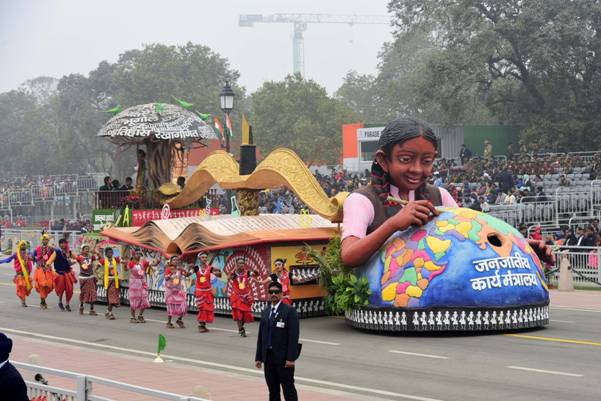
- 13 Jul 2025
In News:
In a significant milestone for tribal education in India, nearly 600 students from Eklavya Model Residential Schools (EMRSs) across 12 States have successfully cleared top national-level entrance exams like IIT-JEE (Mains & Advanced) and NEET 2024, as per the recent performance assessment by the Ministry of Tribal Affairs. This marks a remarkable improvement in academic outcomes for Scheduled Tribe (ST) students in government-run residential schools.
Breakdown of Performance (2024-25):
- IIT-JEE Mains: 218 students qualified; ~25 expected to secure admission in NITs.
- IIT-JEE Advanced: 34 students qualified; 18 likely to get admission into IITs.
- NEET: 344 students qualified; 3 expected to be placed in AIIMS, others in top government medical colleges.
This is the first comprehensive data compilation for EMRS performance in national competitive exams, a sharp increase from earlier years when only a few dozen tribal students achieved similar success.
Government Support & Outreach:
To further encourage these meritorious students, the Ministry of Tribal Affairs is launching a dedicated outreach programme:
- Students will be actively supported and hand-held through the post-matric scholarship application process.
- The Scholarship Division of the Ministry will proactively connect with all qualifying students to ensure they receive their entitled financial support.
- This initiative reflects a paradigm shift from passive support to active facilitation.
Institutional and Policy Framework:
- EMRS is a flagship scheme under the Ministry of Tribal Affairs, aimed at providing quality residential education from Class 6 to 12 to tribal students in remote and underdeveloped regions.
- Introduced in 1998, the programme was revamped in 2018–19 to enhance infrastructure and expand coverage.
- Schools are being established in blocks with >50% tribal population and at least 20,000 tribal persons.
- The government has targeted the establishment of 728 EMRSs by 2026.
- The National Education Society for Tribal Students (NESTS), an autonomous body under the Ministry, is tasked with operationalizing these schools.
Key Features of EMRS:
- Co-educational residential schools from Class VI to XII.
- Follow CBSE curriculum; completely free education.
- Special focus on local tribal culture, sports, and skill development.
- Each school has a capacity of 480 students, with gender parity in enrolment.
- Reservation norms: 10% for non-ST students; 20% under sports quota for ST students excelling in sports.
- Infrastructure includes academic blocks, hostels, teacher accommodations, labs, sports grounds, and cultural activity spaces.
Recent Initiatives and Recognition:
- The success is partly attributed to strategic partnerships with reputed coaching institutes facilitated by NESTS for IIT-JEE and NEET preparation.
- Around 85% of EMRS students belong to Scheduled Tribes, including Particularly Vulnerable Tribal Groups (PVTGs).
- The achievements were acknowledged in a high-level review meeting chaired by Union Tribal Affairs Minister Jual Oram and MoS Durgadas Uikey, who lauded the efforts of teachers, administrators, and students.
Advanced Towed Artillery Gun System (ATAGS)
- 12 Jul 2025
In News:
The Advanced Towed Artillery Gun System (ATAGS) marks a significant milestone in India’s defence modernization. Developed indigenously under the ‘Make in India’ initiative, the system is poised to replace the Indian Army’s ageing artillery with cutting-edge, high-performance firepower.
Key Facts:
- Calibre: 155 mm / 52 calibre
- Maximum Range: Up to 48 km, among the longest for towed artillery globally
- Developer: Defence Research and Development Organisation (DRDO) through ARDE (Pune)
- Production Partners: Bharat Forge Ltd and Tata Advanced Systems Ltd
Project Timeline & Cost:
- Project initiated in 2012 and completed within 12 years
- In March 2025, the Defence Ministry signed contracts worth ?6,900 crore for procurement of 307 ATAGS units and associated 6×6 towing vehicles
- Delivery scheduled over five years
Salient Features of ATAGS:
- Firing Modes: Burst, Intense, and Sustained fire
- Firing Capacity: Up to five rounds per minute, 60 rounds per hour
- Automation: Fully electric gun-laying and ammunition handling, replacing conventional hydraulics for enhanced reliability and reduced maintenance
- Shoot-and-Scoot Capability: Quick repositioning post firing to avoid counter-battery fire
- Rapid Deployment: Becomes operational within 90 seconds
- Mobility: Towed by a 6×6 high mobility vehicle, suitable for desert and mountainous terrain
- Ammunition Compatibility: Supports all 155 mm ammunition types including high-explosive, smoke, illumination, and precision-guided shells
- Minimum Range Advantage: Capable of achieving shortest minimum range at high elevation angles
- Operating Conditions: Designed for extreme climates
Strategic Significance:
- Artillery Modernization: Replaces vintage, smaller-calibre guns, enhancing range, accuracy, and tactical mobility
- Indigenous Content: Over 80% components sourced domestically, contributing to Aatmanirbhar Bharat
- Mission Mode Achievement: Described as an "exemplary mission-mode success" by the Ministry of Defence
- Multi-Sector Collaboration: Joint effort between DRDO, Indian Army, public and private sector manufacturers
Broadcasting Infrastructure and Network Development (BIND) Scheme

- 12 Jul 2025
In News:
The Government of India has proposed the establishment of a new Akashvani Kendra in Ujjain, Madhya Pradesh, under the Broadcasting Infrastructure and Network Development (BIND) Scheme.
About BIND Scheme
- Type: Central Sector Scheme
- Implementing Agency: Ministry of Information and Broadcasting
- Beneficiary: Prasar Bharati (All India Radio and Doordarshan)
- Objective: To provide financial support for:
- Expansion and modernization of broadcasting infrastructure
- Content development for domestic and international audiences
- Civil works related to Prasar Bharati’s operations
Key Features
- Facilitates technological upgradation of All India Radio (AIR) and Doordarshan (DD)
- Enhances reach in border, Left-Wing Extremism (LWE)-affected, and strategic regions
- Focuses on high-quality and diverse content
- Expands the capacity of the DTH platform, enabling more channels for viewers
- Aims to boost AIR FM coverage from 59% to 66% of India's geographical area and from 68% to 80% of the population
Significance
- Supports regional broadcasting, especially in underserved and aspirational districts
- Promotes cultural preservation and grassroots-level development narratives
- Expected to create indirect employment in manufacturing and broadcast services sectors
- Aids in ensuring last-mile delivery of public communication and information services
The proposed Akashvani Kendra in Ujjain aligns with the broader vision of ‘Viksit Bharat’, focusing on inclusive media access and robust public broadcasting infrastructure. It underscores the growing synergy between the Centre and States to enhance media penetration and communication outreach.
Coartem Baby
- 12 Jul 2025
In News:
In a significant breakthrough in global health, Switzerland has approved Coartem Baby, the first malaria treatment specifically designed for newborns and infants weighing 2–5 kg. Developed by Novartis in collaboration with the Medicines for Malaria Venture (MMV) and international health partners, this pediatric formulation is set to fill a critical treatment gap in malaria-endemic regions.
About Coartem Baby:
- What it is: A pediatric formulation of the antimalarial drug artemether-lumefantrine, customized for babies under 6 months of age (2–5 kg weight range). It is also known as Riamet Baby in some countries.
- Developed by: Novartis, in partnership with MMV, with support from the governments of Switzerland, UK, Netherlands, World Bank, and the Rockefeller Foundation.
- Approval path: Authorized under Swissmedic’s Global Health Products pathway, with fast-track approvals expected in eight African nations: Burkina Faso, Ivory Coast, Kenya, Malawi, Mozambique, Nigeria, Tanzania, and Uganda
Key Features:
- Infant-Specific Design:
- Dose ratio adapted for immature liver function
- Dissolves easily in liquids, including breast milk
- Cherry-flavoured for easier administration
- Public Health Impact:
- Addresses treatment needs of ~30 million newborns born annually in malaria-endemic African countries
- Targets the most vulnerable group previously excluded from clinical trials and vaccination coverage
- Safety Advantage:
- Eliminates the risk of off-label dosing from older children’s formulations
- Offers a clinically proven, age-appropriate treatment alternative
- Access Model: Will be distributed on a largely not-for-profit basis in malaria-endemic countries
Why it matters:
- Fills a Long-standing Treatment Gap: Until now, no antimalarial drug was approved for infants weighing less than 4.5 kg, despite their high risk.
- Impact on Child Mortality:
- As per 2023 data, 597,000 malaria deaths occurred globally, with ~75% among children under 5, mostly in Africa
- The approval of Coartem Baby could drastically reduce mortality in this group
Key Facts about Malaria:
- Cause: Life-threatening illness caused by Plasmodium parasites, transmitted by infected female Anopheles mosquitoes
- Most Dangerous Species:
- Plasmodium falciparum
- Plasmodium vivax
- Transmission: Not contagious person-to-person, but can spread via infected blood or needles
- Symptoms (appear 10–15 days after bite):
- Fever, chills, vomiting, headache
- Severe: seizures, breathing difficulty, jaundice, dark urine, coma, death
- Immunity: Partial immunity can develop in endemic regions, complicating diagnosis
Accelerator Mass Spectrometry (AMS) Dating
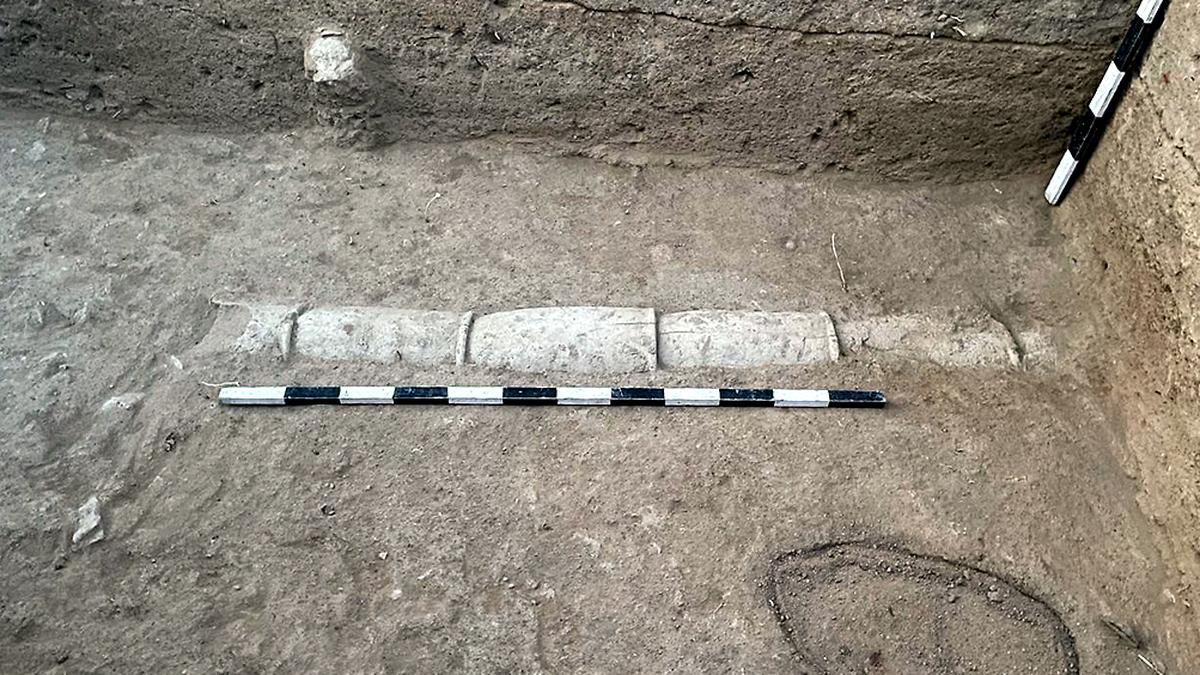
- 12 Jul 2025
In News:
The Tamil Nadu State Department of Archaeology (TNSDA) has sent 23 charcoal samples from seven archaeological excavation sites to the Beta Analytic Laboratory in the United States for Accelerator Mass Spectrometry (AMS) dating, aiming to establish an accurate chronology of the cultural deposits unearthed during the 2024–25 excavation season.
Key Discoveries:
- Keeladi: Over 500 antiquities, 100 inscribed potsherds, including red-slipped ware with fish motifs.
- Porpanaikkottai: From 11 trenches, 1,792 antiquities such as pottery, glass beads, and bangles were found.
- Tirumalapuram: A stone slab chamber with urn burials—a first in Tamil Nadu’s megalithic excavation record.
What is AMS Dating?
- A high-precision radiocarbon dating technique that measures the Carbon-14 (C-14) content in archaeological samples.
- Unlike conventional radiometric methods, AMS counts individual atoms of C-14, not their radioactive decay.
How It Works:
- Sample Preparation: Organic samples like charcoal are chemically treated and converted to graphite.
- Ion Generation: A cesium beam bombards the graphite, generating negatively charged carbon ions.
- Acceleration: Ions are propelled by a tandem electrostatic accelerator to high kinetic energies.
- Stripping & Detection:
- Ions pass through a stripping chamber to become positively charged.
- Magnetic fields separate C-12, C-13, and C-14 isotopes based on mass.
- C-14 atoms are counted to calculate the sample’s age.
Advantages of AMS Dating:
|
Feature |
AMS Dating |
Conventional Radiocarbon Dating |
|
Sample Size |
As little as 20 mg |
Requires ≥10 grams |
|
Precision |
Higher – atom-level count |
Lower – based on decay measurement |
|
Time |
Results within hours to days |
1–2 days or more |
|
Destructiveness |
Less destructive, ideal for rare artifacts |
More sample consumed |
|
Sensitivity |
Detects trace C-14 levels in minute samples like seeds, blood, etc. |
Limited sensitivity |
Applications of AMS:
- Archaeology: Dating of charcoal, wood, bones, pottery layers.
- Climate Science: Carbon mapping in marine and sediment systems.
- Geology/Oceanography: Sediment and core dating.
- Biomedical Research: Drug microdosing, tracing labeled compounds.
Admiralty (Jurisdiction and Settlement of Maritime Claims) Act, 2017
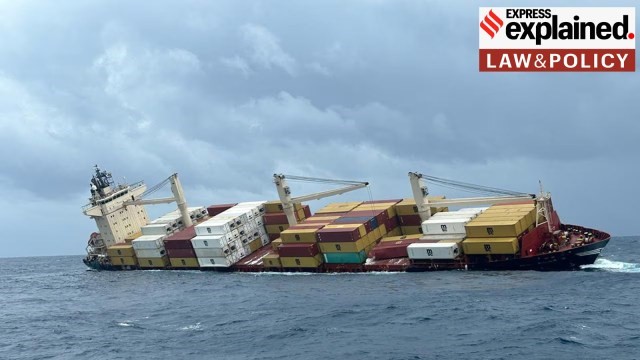
- 12 Jul 2025
In News:
In a rare legal move, the Kerala High Court ordered the conditional arrest of the Liberian container ship MSC Akiteta II, anchored at Vizhinjam Port. The Kerala government filed an admiralty suit seeking ?9,531 crore compensation for alleged environmental and economic damage caused by the sinking of MSC Elsa III.
Legal Framework: Admiralty (Jurisdiction and Settlement of Maritime Claims) Act, 2017
Purpose:
- Consolidates and updates maritime laws in India.
- Replaces outdated colonial legislations like:
- Admiralty Court Act, 1861
- Colonial Courts of Admiralty Acts of 1890 and 1891
- Relevant provisions of Letters Patent, 1865
Applicability:
- Applies to all vessels, regardless of owner’s residence or domicile.
- Exemptions:
- Inland vessels under the Inland Vessels Act, 1917
- Warships and other government vessels used for non-commercial purposes
- Foreign government vessels used for non-commercial purposes (as notified)
Key Provisions:
Section 4 – Maritime Claims:
High Courts can adjudicate disputes related to:
- Damage to vessels or marine environment
- Oil pollution and hazardous cargo
- Ownership or possession of a vessel
- Loss of life or injury due to vessel operations
- Carriage agreements (goods/passengers)
- Claims for unpaid wages, port dues, or cargo losses
Section 5 – Arrest of Vessels:
- Courts may order “arrest” of a ship to secure a maritime claim.
- Arrest can be made even if the ship is not directly involved but is owned by the liable party.
- It serves to ensure that compensation or security is provided before the vessel is released.
- Claimants may be asked to furnish an unconditional undertaking to compensate for wrongful arrest, if proved later.
Jurisdictional Expansion:
- Earlier limited to Bombay, Calcutta, and Madras High Courts.
- Now extended to Kerala, Karnataka, Odisha, Telangana, and Andhra Pradesh as well.
- Jurisdiction covers territorial waters up to 12 nautical miles, including seabed, subsoil, and airspace.
In Rem vs In Personam:
- Legal action can be initiated directly against the vessel (in rem) or against the owner/operator (in personam), based on the nature of the claim.
National Maritime Domain Awareness (NMDA) Project
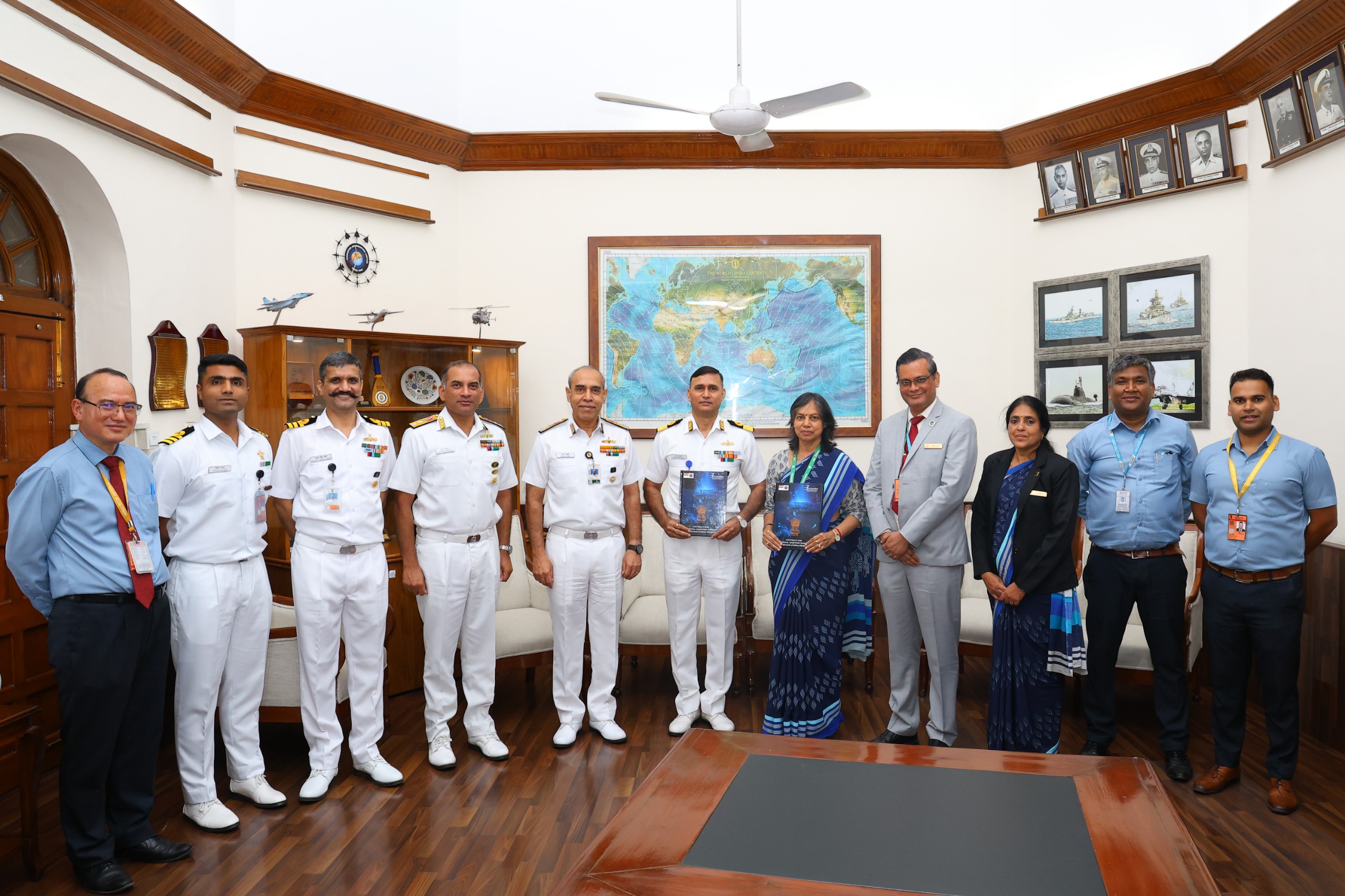
- 11 Jul 2025
In News:
The Indian Navy has signed a significant contract with Bharat Electronics Limited (BEL), Bengaluru for the implementation of the National Maritime Domain Awareness (NMDA) Project, a strategic initiative to strengthen India’s maritime and coastal security infrastructure.
Key Objectives and Scope
- Purpose: The NMDA Project aims to create a unified, real-time maritime surveillance and information-sharing framework to safeguard India's vast coastline and maritime interests.
- It seeks to enhance coordination among maritime stakeholders, including national agencies, coastal states, and union territories.
Major Components of the Project
- Upgrade of NC3I Network: The existing National Command, Control, Communication and Intelligence (NC3I) Network will be upgraded to a more advanced NMDA Network.
- AI Integration: Artificial Intelligence-enabled software will be deployed to enable smart surveillance, automated threat detection, and informed decision-making.
Multi-Agency NMDA Centre
- The Information Management and Analysis Centre (IMAC) at Gurugram — currently the nodal agency of the NC3I Network — will be transformed into a Multi-Agency NMDA Centre.
- The upgraded centre will include representatives from 15 national agencies across seven key ministries, such as Defence, Shipping, Petroleum, and Fisheries, ensuring seamless inter-agency coordination.
Operational and Strategic Benefits
- Integrated Maritime Picture: The system will link various stakeholders to provide a comprehensive operational view of India’s maritime domain.
- Enhanced Response: It will improve response mechanisms to maritime threats, search and rescue operations, environmental incidents, and other contingencies.
- Data Integration: Inputs from sectors such as commercial shipping and fisheries will be integrated into the system for improved situational awareness.
Execution and Administration
- The project will be implemented on a turnkey basis and administered by the Indian Navy.
- BEL will act as the lead system integrator, delivering both hardware and AI-enabled software solutions for the project.
Miniature Plasma Loops

- 11 Jul 2025
In News:
A significant discovery by Indian and international astronomers has unveiled the existence of miniature plasma loops in the lower layers of the Sun’s atmosphere, shedding new light on how the Sun stores and releases magnetic energy—a long-standing mystery in solar physics.
- These loops are tiny in scale, measuring 3,000–4,000 km in length and less than 100 km in width, making them difficult to detect with earlier instruments. Despite their short lifespan of only a few minutes, they offer crucial insights into magnetic reconnection—a process where tangled magnetic field lines snap and realign, releasing immense energy.
- The research was led by scientists at the Indian Institute of Astrophysics (IIA), Bengaluru, under the Department of Science and Technology (DST), in collaboration with global institutions including NASA, the Max Planck Institute, and the Big Bear Solar Observatory (BBSO).
Key Findings and Instruments Used
- The team used high-resolution imaging and multi-wavelength spectroscopy, combining data from the Goode Solar Telescope (BBSO), NASA’s IRIS, and the Solar Dynamics Observatory (SDO).
- The loops were observed in the H-alpha spectral line from hydrogen atoms—crucial for studying the solar chromosphere.
- Spectroscopic data from IRIS revealed non-thermal broadening of spectral lines, indicating explosive magnetic activity.
- Plasma jets erupting from the tops of these loops point to reconnection-driven events, similar to those that cause large-scale solar eruptions.
- Using Differential Emission Measure (DEM) analysis, the plasma inside these tiny loops was found to reach temperatures of several million degrees, which is unexpectedly high for regions in the dense chromosphere.
Why It Matters
- Although coronal loops in the outer solar atmosphere have been studied for decades, these miniature loops offer a unique window into the fine-scale dynamics of the Sun's magnetic environment. Understanding them is crucial for grasping the mechanisms behind solar flares, coronal heating, and space weather phenomena that impact Earth.
Future Prospects
- The findings highlight the need for next-generation solar observatories. India’s upcoming National Large Solar Telescope (NLST)—a 2-meter aperture facility proposed near Pangong Lake, Ladakh—aims to provide sharper images of the Sun’s chromosphere and better magnetic field data.
Great Hornbill Sighting
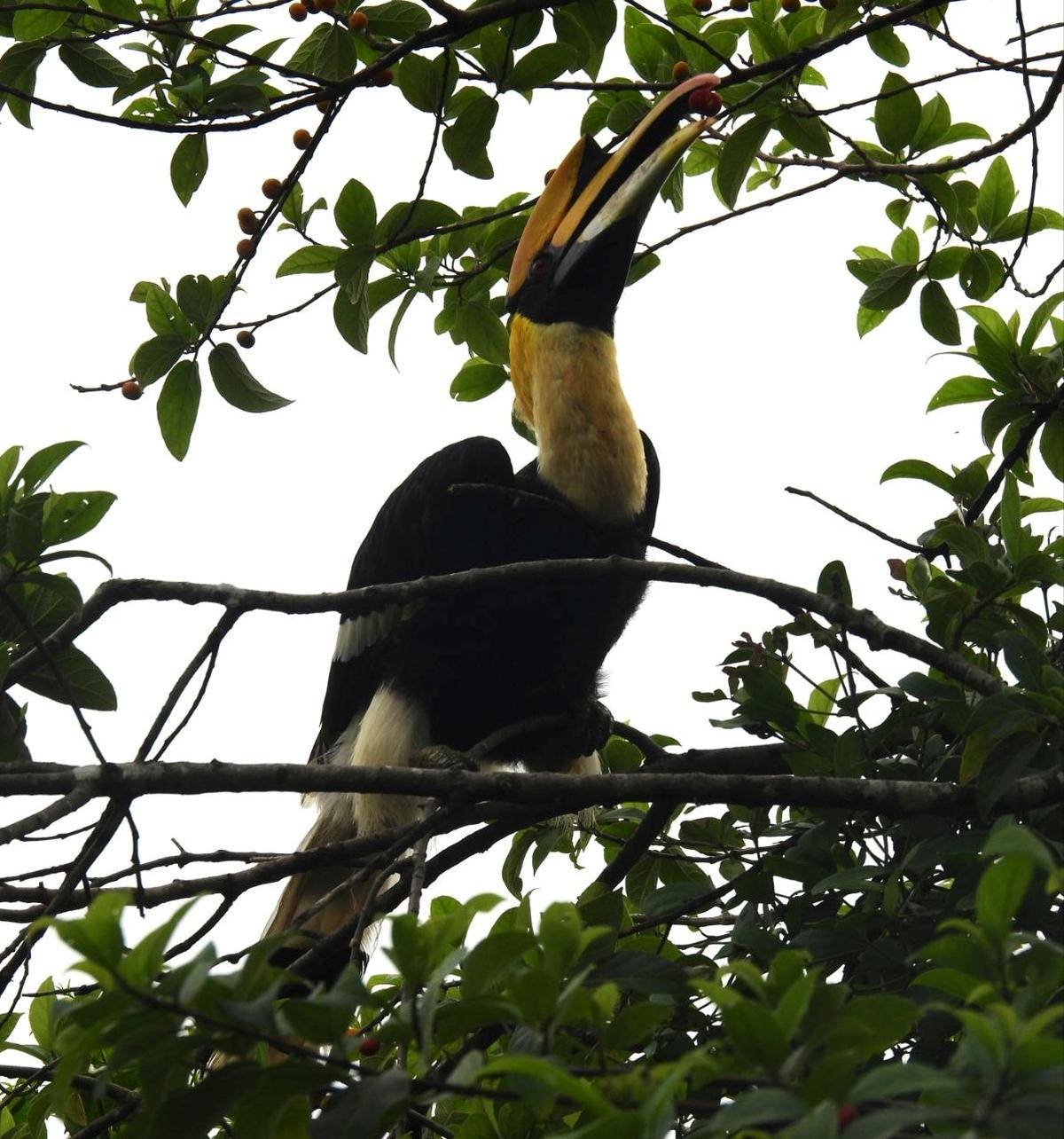
- 11 Jul 2025
In News:
In a rare and ecologically significant event, the Great Hornbill (Buceros bicornis), Kerala’s State Bird, was recently spotted in the coastal belt of Kakkampara, near Ezhimala in Kannur district. This area lies well outside the species’ typical forested habitats, making the sighting both unusual and important for biodiversity assessments.
About the Great Hornbill
- The Great Hornbill, also known as the great Indian hornbill or great pied hornbill, is one of the largest members of the hornbill family.
- It is primarily found in the Western Ghats, forests along the Himalayas, and parts of Southeast Asia.
- Its preferred habitat includes wet evergreen and moist deciduous forests at elevations between 600 to 2000 meters.
- This large, vividly colored bird measures between 95 to 120 cm in length with a wingspan of 151 to 178 cm, and typically weighs around 3 kilograms.
- The hornbill is easily identifiable by its prominent casque, a hollow structure on top of its large yellow bill. Males and females look similar, although males can be distinguished by their red irises and slightly larger casques, whereas females have white irises.
- Hornbills are primarily frugivorous, feeding on a variety of forest fruits, especially figs. However, they are opportunistic and may also consume small reptiles, birds, and mammals.
- A distinctive feature of the Great Hornbill is the tinted oil secreted by its preen gland, which gives its feathers, bill, and casque a yellow to reddish hue during grooming.
Conservation Status and Legal Protection
- The Great Hornbill is listed as ‘Vulnerable’ on the IUCN Red List due to habitat loss, hunting, and fragmented populations.
- In India, it is provided the highest level of protection under Schedule I of the Wildlife (Protection) Act, 1972, making it illegal to hunt or trade the species.
Ecological Importance of the Ezhimala Sighting
The occurrence of the Great Hornbill in a coastal region far from its usual forest range is considered a valuable ecological indicator. Experts believe such sightings could hint at changing habitat patterns, microhabitat availability, or even displacement due to habitat disturbance in core forest areas. The area around Ezhimala, despite human habitation, appears to sustain enough ecological richness to attract such a rare forest species.
India’s Battery Passport System
- 11 Jul 2025
In News:
The Government of India is preparing to implement a Battery Passport framework to enhance safety, traceability, and export readiness of electric vehicle (EV) batteries. The initiative is being spearheaded by NITI Aayog in collaboration with multiple ministries and stakeholders.
What is a Battery Passport?
A Battery Passport is a digital identity assigned to each EV battery, embedded in a QR code, which stores complete lifecycle information. This includes:
- Origin and manufacturing details
- Chemical composition and configuration
- Performance metrics and carbon footprint
- Date of manufacture and service history
- End-of-life data for recycling and reuse
The system assigns each battery a unique ID, akin to an Aadhaar for batteries, ensuring transparency and traceability across its lifecycle.
Key Features:
|
Feature |
Description |
|
QR Code Integration |
Allows users and service providers to scan and access battery details |
|
Lifecycle Tracking |
Monitors battery data from production to disposal |
|
Unique Digital Identity |
Each battery is individually identifiable, preventing cell mismatch |
|
Real-Time Monitoring |
Tracks performance, degradation, and usage patterns |
|
Standardised Data Format |
Includes manufacturer info, batch ID, composition, carbon metrics |
|
Controlled Data Access |
Enables secure sharing with regulators, manufacturers, and recyclers |
|
EU Compliance Ready |
Aligns with European Union regulations for batteries above 2 kWh |
Why is it Needed?
- Battery Safety: Addresses concerns due to frequent EV fire incidents linked to faulty or mismatched battery cells.
- Battery Swapping: Ensures interoperability and standardisation, essential for the upcoming battery-swapping policy.
- Export Promotion: Positions Indian batteries to comply with global traceability norms, especially in EU markets.
- Lifecycle & Performance Transparency: Batteries make up ~40% of EV cost; users benefit from informed decision-making.
- Circular Economy: Facilitates reuse, recycling, and end-of-life recovery to promote sustainability.
Expected Benefits
- Improved EV safety and reliability
- Enhanced consumer confidence
- Boost to India’s EV exports
- Support for circular economy in battery usage
- Industry-wide quality and compliance enforcement
Vera C. Rubin Observatory

- 11 Jul 2025
In News:
The Vera C. Rubin Observatory in Chile has unveiled its first stunning images, highlighting the capabilities of its 3,200-megapixel digital camera — the most powerful ever constructed.
Location and Background:
- Situated 8,684 feet above sea level on Cerro Pachón mountain, Chilean Andes.
- Named after Vera C. Rubin, the astronomer who first provided evidence for dark matter in the 1970s.
- Joint initiative of the U.S. Department of Energy (DOE) and the National Science Foundation (NSF).
Objective:
The observatory aims to conduct an unprecedented 10-year survey of the southern sky, addressing critical questions like:
- Structure and formation of the Milky Way
- Existence of Planet 9
- Detection of potentially hazardous asteroids
- Nature of dark matter and dark energy
Key Features:
1. Simonyi Survey Telescope
A state-of-the-art telescope, unique for:
a) Wide Field of View:
- Captures an area equivalent to 40 full Moons in a single shot.
- Utilizes a three-mirror design:
- Primary Mirror: 8.4 m
- Secondary Mirror: 3.5 m
- Tertiary Mirror: 5 m (part of primary)
- Enables scanning of the entire visible sky every three nights.
b) Largest Digital Camera in the World:
- Size: Comparable to a small car
- Weight: 2,800 kg
- Resolution: 3,200 megapixels
- Sensor sensitivity: Detects objects 100 million times dimmer than visible to the naked eye
- Has six optical filters to capture various wavelengths (e.g., UV for hot stars, IR for distant galaxies)
c) Fastest Slewing Capability:
- Adjusts from one celestial target to another in just five seconds
- Enables up to 1,000 images per night
Scientific Potential and Impact
- Will collect 20 terabytes of data every night, generating nearly 10 million alerts per night for any detected changes in the sky.
- Already identified 2,104 new asteroids, including 7 near-Earth objects, using only 10 hours of preliminary data.
- Expected to catalogue:
- 5 million+ asteroids
- 100,000 near-Earth objects
- More than double the total known asteroids within a year of full operation
- Facilitates a high-resolution map of the universe’s structure—vital to understand the distribution of dark matter and dark energy, which together constitute 95% of the universe.
Sheesh Mahal
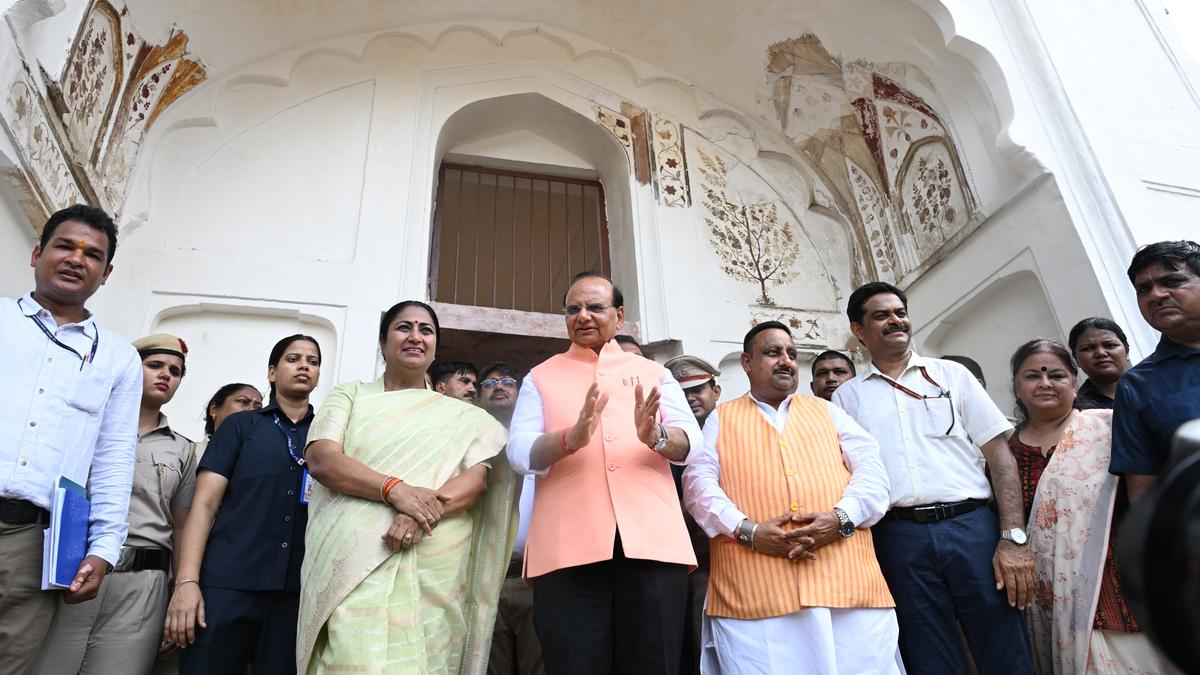
- 10 Jul 2025
In News:
The Sheesh Mahal, a 17th-century Mughal-era palace located in Shalimar Bagh, North Delhi, was recently restored and reopened to the public by the Union Culture and Tourism Minister. The restoration was carried out by the Archaeological Survey of India (ASI) and the Delhi Development Authority (DDA).
About Sheesh Mahal
- Built in 1653 by Izz-un-Nisha Begum, wife of Mughal Emperor Shah Jahan.
- Inspired by and a replica of Shalimar Bagh in Kashmir, designed as a royal retreat from Shahjahanabad.
- The garden was originally called Aizzabad Garden, later renamed Shalimar, meaning “abode of pleasure”.
- The palace was the site of Aurangzeb’s first coronation in 1658.
- Declared a monument of national importance in 1983, under ASI protection.
Architectural Features
- Constructed using red sandstone and brick masonry.
- Features archways, three-arched dalans, and a central hall with compartments on each wing.
- A Baradari (pavilion) lies in the main building with a water channel passing through it.
- Houses mirror-worked chambers with paintings in Kangra and Rajasthani qalam, depicting poetic imagery by Keshav, Surdas, and Bihari.
- Adjacent structure served as a Hamam (bathhouse).
Restoration Highlights
- ASI restored the palace’s original heritage features.
- DDA recreated the traditional Mughal Char Bagh-style landscape.
- Traditional materials used: Lime surkhi, lakhori bricks, gud (jaggery), belgiri, and urad dal.
- An old baradari and three heritage cottages were also restored.
New Additions for Public Engagement
- Two heritage cottages repurposed:
- The Readers Café Corner – a literary café.
- Café Shalimar – for general visitors.
2nd Edition of the NER District SDG Index
- 10 Jul 2025
In News:
NITI Aayog, in collaboration with the Ministry of Development of North Eastern Region (MoDoNER) and with technical support from UNDP, released the second edition of the North Eastern Region District SDG Index (2023–24).
About the NER District SDG Index
- First Edition: Released in August 2021
- Current Edition: Covers 121 districts across the 8 North Eastern States
- Developed By: NITI Aayog, MoDoNER, and UNDP
- Purpose:
- Monitor district-wise progress on Sustainable Development Goals (SDGs)
- Provide evidence-based planning, resource allocation, and intervention strategies
- Ensure localisation of SDGs and leave no one behind
Scoring Categories
Districts are classified into four categories:
- Achiever: Score = 100
- Front Runner: Score 65–99
- Performer: Score 50–64
- Aspirant: Score < 50
Composite Score Range:
- Highest: Hnahthial, Mizoram – 81.43
- Lowest: Longding, Arunachal Pradesh – 58.71
Key Highlights
- 85% of districts showed an increase in composite scores.
- All districts of Mizoram, Sikkim, and Tripura attained Front Runner status.
- Hnahthial (Mizoram) emerged as the best-performing district.
- Nagaland entered the Top 10 with 3 districts.
- Sikkim showed the most consistent intra-state performance with a score range of just 5.5 points.
- Assam saw notable improvements in Zero Hunger, Quality Education, Clean Water & Sanitation, and Decent Work & Economic Growth.
Top Performing Districts
Significance
- Supports the Viksit Bharat @2047 vision by targeting SDG achievement by 2030.
- Enhances cooperative federalism by aligning state and district efforts with national goals.
- Acts as a diagnostic and planning tool for identifying gaps and prioritising interventions.
UAE Golden Visa Scheme
- 10 Jul 2025
In News:
The United Arab Emirates (UAE) has introduced a nomination-based pilot Golden Visa programme targeting skilled individuals from India and Bangladesh. However, recent rumours around a ?23 lakh “lifetime visa” triggered misinformation, later debunked by UAE authorities.
What is a Golden Visa?
- A long-term residency visa allowing foreign nationals to live, work, or study in the UAE without a local sponsor.
- Designed to attract investors, entrepreneurs, scientists, and skilled professionals.
- Offers 5 to 10 years of renewable residency, and in some cases, lifetime validity under specific frameworks.
Key Features of the UAE Golden Visa Scheme
|
Feature |
Details |
|
Residency |
Long-term (5–10 years); in some cases lifetime under nomination |
|
Sponsorship |
Not required (self-sponsored) |
|
Eligibility Categories |
Investors, entrepreneurs, scientists, doctors, artists, athletes, PhD holders, exceptional students |
|
Benefits |
Sponsor family and domestic staff; multiple entry; no need to stay in UAE continuously |
|
New Nomination-Based Model |
Pilot phase launched for India and Bangladesh — selection based on professional merit and contributions |
|
Application Process |
Managed through UAE’s official channels; some remote application facilities (e.g., OneVASCO centres) available |
|
No Minimum Investment Requirement (in new model) |
Unlike earlier versions requiring AED 2 million+ in assets or business |
Controversy: ?23 Lakh ‘Lifetime Golden Visa’ Rumour
- A viral rumour claimed that Indians could buy a lifetime UAE Golden Visa for ?23.3 lakh (AED 1,00,000).
- Debunked by UAE Government within 48 hours as false and misleading.
- Originated from a press release by Rayad Group, later withdrawn and discredited.
- UAE authorities clarified: No consultancy is authorised to process Golden Visas outside official channels.
- Golden Visas are not available for simple purchase; eligibility is merit-based, not transactional.
Eligibility vs. Misconception
- Golden Visas are for High Net-Worth Individuals (HNWIs) and exceptional talent — not for general migration or middle-class aspirations.
- Traditional routes still require investments of AED 2 million (~?4.67 crore) or equivalent in real estate or business.
Comparison with Other Countries’ Golden Visa Models
|
Country |
Investment Requirement |
|
Portugal |
€500,000 real estate / job creation / capital transfer |
|
Greece |
€250,000 property (rising in urban areas) |
|
Italy |
Startups, bonds, or public projects |
|
Singapore |
SGD 2.5 million under Global Investor Programme |
|
Grenada |
$235,000 donation or $270,000 property for citizenship |
|
UAE (Traditional) |
AED 2 million in real estate or business assets |
Significance for India-UAE Relations
- Enhances people-to-people links under the India–UAE Comprehensive Economic Partnership Agreement (CEPA).
- Offers Indian professionals access to UAE’s innovation, business, and academic ecosystem.
- Promotes economic diversification of UAE beyond oil — with India as a strategic partner.
Amaravati Quantum Valley Declaration (AQVD)
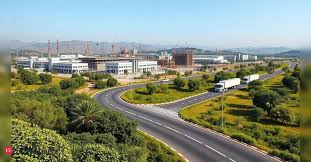
- 10 Jul 2025
In News:
The Government of Andhra Pradesh has officially approved the Amaravati Quantum Valley Declaration (AQVD), aiming to transform Amaravati into India’s first Quantum Valley and a global hub for quantum technologies.
What is AQVD?
- A strategic framework signed by the Andhra Pradesh Government, IBM, TCS, L&T, academia, and startups.
- It envisions a collaborative ecosystem for quantum computing, communication, sensing, and chip development.
- Seeks to align with India’s National Quantum Mission (NQM) to position Amaravati as a deep-tech capital.
Key Features and Targets
- Investment Goals: Total investment target of $1 billion by 2029, with $500 million by 2027.
- QChipIN: Creation of India’s largest open quantum testbed, integrating quantum computers and enabling hands-on innovation.
- Focus Areas: Quantum computing, quantum chip design, sensing technologies, and secure quantum communication.
- Skilling & Research: Encourages development of quantum talent and promotes industry-academia synergy.
Quantum Computing – Core Concepts
- Qubit: Basic unit of quantum data, unlike classical bits, can be in a state of superposition (0 and 1 simultaneously).
- Superposition: Enables parallel processing.
- Entanglement: Qubits can be interlinked, allowing instantaneous state sharing.
- Quantum Gates: Analogous to classical logic gates but work on qubits to perform complex operations.
Strategic & National Significance
- Dual-Use Technology: Quantum computing impacts national security, health, climate modeling, logistics, cryptography, and more.
- Data Sovereignty: Reduces dependence on foreign cloud-based quantum platforms.
- Global Competitiveness: Puts India on the map with nations like the US, China, and the EU in the quantum race.
Related National Initiatives
- National Quantum Mission (NQM):
- Launched with ?6,003 crore outlay.
- Target: Develop quantum computers with 50–1000 qubits by 2031.
- QpiAI-Indus (2025): India’s first full-stack quantum computer with 25 superconducting qubits.
- ISRO-SAC Projects: Satellite-based Quantum Key Distribution (QKD) for ultra-secure communications.
- Quantum Materials: Focus on superconductors and topological materials for robust devices.
Challenges Ahead
|
Challenge |
Description |
|
Decoherence |
Qubits are unstable and prone to error. |
|
Scalability |
Building large-scale, fault-tolerant systems is difficult. |
|
Cost |
Requires ultra-cold cryogenic systems and electromagnetic shielding. |
Japonica Rice
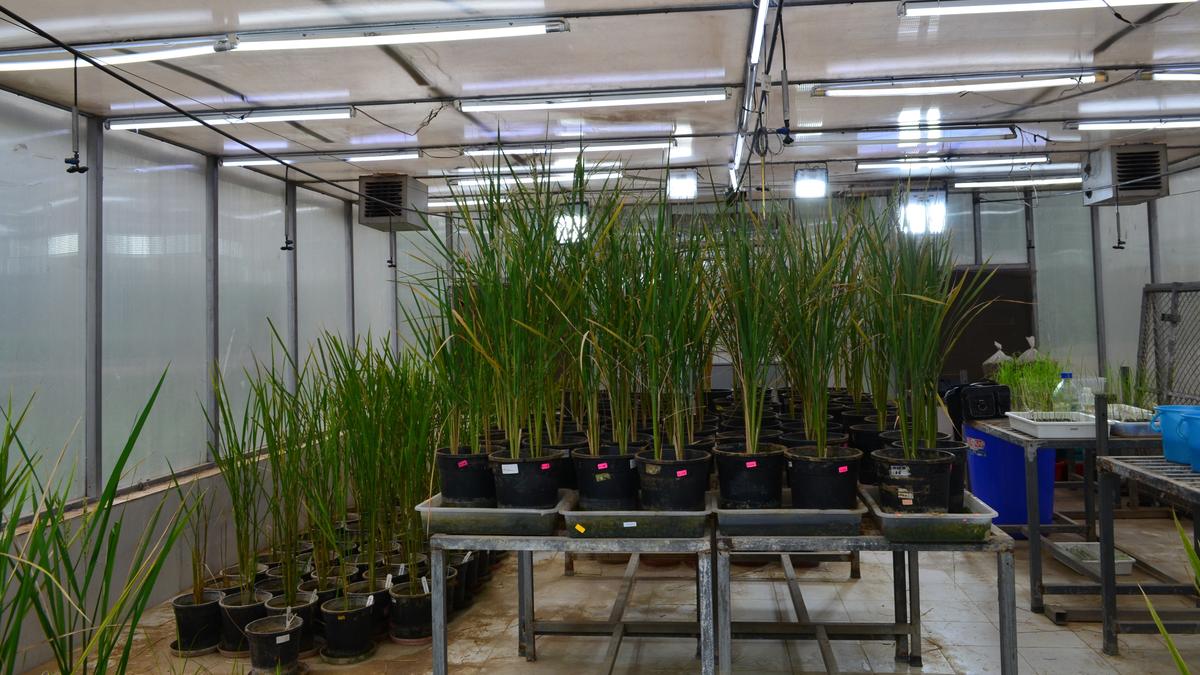
- 10 Jul 2025
In News:
The National Institute of Plant Genome Research (NIPGR), New Delhi, has successfully used CRISPR-Cas9 gene-editing technology to develop japonica rice lines with enhanced phosphate uptake, leading to up to 40% higher yield under limited fertilizer conditions. The research is published in the Plant Biotechnology Journal.
Background: Phosphorus and Agriculture
- Phosphorus (P) is vital for plant growth, involved in photosynthesis, energy transfer, and root development.
- However, only 15–20% of phosphate fertilizers are absorbed by crops; the rest is lost due to leaching or chemical fixation in soils.
- India imports ~4.5 million tonnes of DAP (Diammonium Phosphate) annually, making it crucial to improve P-use efficiency.
The Innovation: CRISPR-Based Precision Editing
- Target Gene: OsPHO1;2, a phosphate transporter responsible for P movement from root to shoot.
- Repressor Gene Identified: OsWRKY6, a negative regulator of OsPHO1;2.
- Initial approach (complete knockout of repressor) caused negative effects due to loss of other essential functions.
- Final strategy: Only the 30 base-pair binding site of OsWRKY6 on the promoter was deleted using CRISPR-Cas9, ensuring:
- Increased transporter expression
- Normal functioning of other plant processes
- Enhanced phosphate transfer and absorption
Key Outcomes:
- Yield Increase:
- 20% with full phosphate dose
- 40% with only 10% of recommended fertilizer
- Improved panicle number and seed count
- No compromise on seed size, starch content, or quality
- Roots acted as efficient phosphate sinks, absorbing more P from soil
- Gene-editing localized to promoter site, ensuring minimal genetic disturbance
Safety and Regulatory Assurance
- No off-target effects: Verified using leading in silico tools and genome analysis
- No foreign DNA in final seeds: Foreign genes (e.g., Cas9, Agrobacterium vector) eliminated via Mendelian segregation
- Plants with precise edits were screened and only accurate lines were cultivated further
Significance for India
- Phosphorus-deficient soils are common across India, especially in alkaline or acidic regions
- Potential application to indica rice varieties, widely grown in India
- Supports sustainable agriculture by reducing fertilizer usage and environmental runoff
- Strengthens food security and reduces import dependency on fertilizers
About Japonica Rice:
- One of the two main varieties of Oryza sativa (the other is Indica)
- Short, sticky grains; grown primarily in Japan, Korea, China, and other East Asian countries
- Model variety used: Nipponbare, due to ease of genetic manipulation
- Japonica is commonly used in research; adaptation to Indian indica cultivars is under process
National Overseas Scholarship Scheme
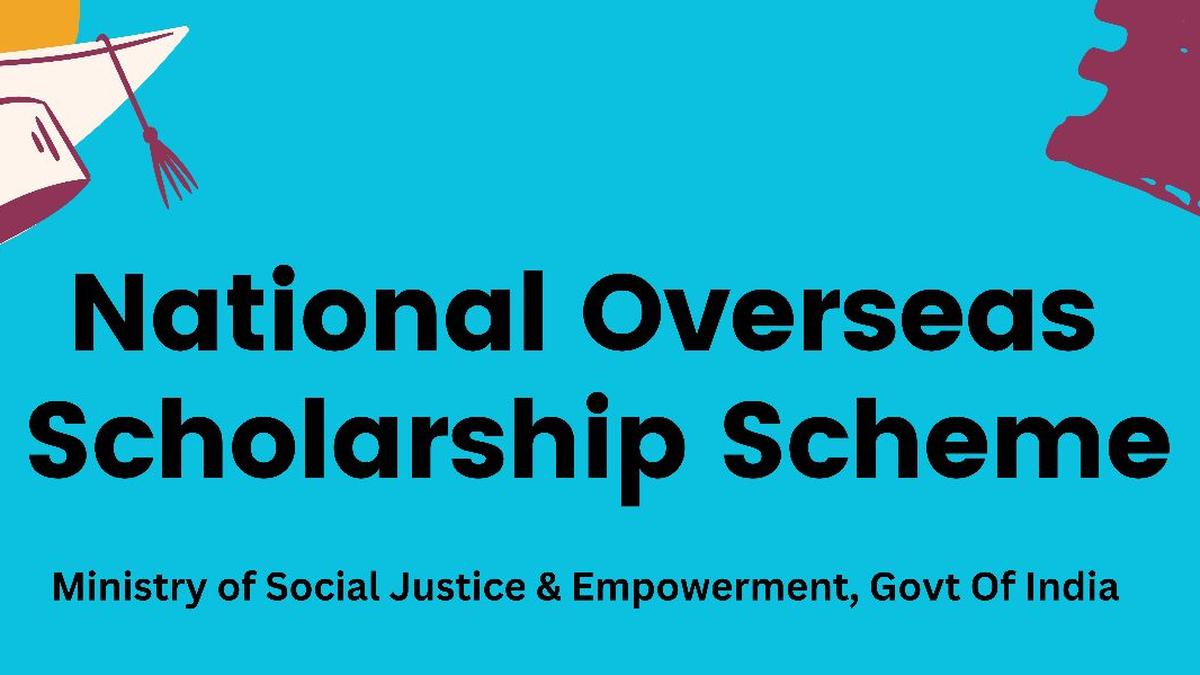
- 09 Jul 2025
In News:
The Ministry of Social Justice and Empowerment has come under scrutiny after withholding provisional award letters for 66 out of 106 selected candidates under the National Overseas Scholarship (NOS) scheme for the 2025–26 cycle. This development has raised concerns regarding funding gaps, administrative bottlenecks, and the future of the scheme intended to uplift marginalised students through access to global education.
About the National Overseas Scholarship Scheme
- The NOS is a Central Sector Scheme aimed at enabling students from socially and economically disadvantaged communities to pursue postgraduate (Master’s) and doctoral (Ph.D.) education abroad in top-ranking universities.
- It provides financial assistance for tuition, living expenses, contingency costs, and travel.
- Administered by: Ministry of Social Justice and Empowerment
- Target Beneficiaries:
- Scheduled Castes (SCs)
- Denotified, Nomadic, and Semi-Nomadic Tribes
- Landless Agricultural Labourers
- Traditional Artisans
- Eligibility Criteria:
- Academic Qualification:
- Master’s: Bachelor’s degree with ≥ 60%
- Ph.D.: Master’s degree with ≥ 60%
- Age Limit: Not more than 35 years as on April 1 of the selection year.
- Income Limit: Annual family income should not exceed ?8 lakh.
- University Criteria: Unconditional admission in Top 500 QS-ranked institutions.
- Other Conditions:
- A maximum of 2 students per family (second eligible only if slots remain).
- Not already settled or studying abroad.
- Key Features:
- Total Annual Slots: 125
- 115 for SCs, 6 for Denotified Tribes, 4 for Labourers/Artisans
- 30% reserved for women candidates
- Two-Phase Selection:
- First: QS Top 500 mandatory
- Second: Open to broader university lists
- State Cap: Maximum 10% slots per state to ensure geographic diversity
Ongoing Evaluation and Policy Review
- The government is currently conducting a performance evaluation of the NOS scheme ahead of its 16th financial cycle (2026–27). This includes assessing issues related to fund disbursal, slot utilization, and implementation gaps.
- A Parliamentary Standing Committee on Social Justice and Empowerment had earlier flagged:
- Insufficient scholarship amounts
- Persistent delays in fund release
- Underutilization of slots
- Need for expanding coverage and increasing annual slots
17th BRICS Summit 2025
- 09 Jul 2025
In News:
The 17th BRICS Summit was held in Rio de Janeiro, Brazil under the theme:
“Strengthening Global South Cooperation for a More Inclusive and Sustainable Governance.”
The summit concluded with the adoption of the Rio de Janeiro Declaration, marking a strategic shift towards BRICS expansion, inclusive multilateralism, and South-South cooperation.
What is BRICS?
- BRICS is an intergovernmental platform of emerging economies originally comprising Brazil, Russia, India, China, and South Africa.
- The term BRIC was coined by economist Jim O’Neill in 2001.
- The grouping evolved from informal dialogue (1st Summit in 2009, Yekaterinburg) to a structured cooperation framework.
- In 2024–25, BRICS underwent expansion and is now referred to as BRICS+.
Key Highlights of the 17th BRICS Summit 2025
1. Expansion of Membership
- Indonesia formally joined BRICS in 2025, becoming its first Southeast Asian member.
- Eleven new BRICS+ partner countries were welcomed: Belarus, Bolivia, Kazakhstan, Cuba, Nigeria, Malaysia, Thailand, Vietnam, Uganda, Uzbekistan.
- The expansion aims to reshape global power dynamics, promote multipolarity, and deepen Asia-Africa-Latin America cooperation.
2. Rio de Janeiro Declaration: Major Themes
A. Global Governance Reform
- Strong call for reforming UNSC, IMF, WTO to reflect contemporary geopolitical and economic realities.
- Supported the UN Summit of the Future's “Pact for the Future”, including the Global Digital Compact and Declaration on Future Generations.
- Emphasized greater participation of the Global South in international decision-making.
B. Peace and Security
- Condemned terrorism in all forms; specifically denounced the Pahalgam attack in India.
- Called for zero tolerance for terrorism and decisive global action against sponsors of terror.
- Opposed securitizing climate change; advocated development-centric responses to global challenges.
C. Technology and Responsible AI
- Released a Statement on Global AI Governance promoting a balance between innovation and regulation.
- Proposed the creation of a BRICS Science & Research Repository to facilitate open access for Global South researchers.
D. Climate Action
- Reaffirmed commitment to the Paris Agreement and UNFCCC principles, especially Common But Differentiated Responsibilities (CBDR).
- Supported Brazil’s hosting of COP-30 (Belem) and endorsed India’s bid for COP-33 in 2028.
- Launched the BRICS Leaders’ Framework on Climate Finance to enhance climate adaptation and finance equity.
E. Economic and Financial Cooperation
- Reviewed the BRICS Economic Partnership Strategy 2025; agreed to frame the 2030 Strategy, focusing on:
- Digital economy
- Trade and investment
- Financial integration
- Sustainable development
- Emphasized inclusive, rules-based multilateral trade systems.
- Launched BRICS Multilateral Guarantee Mechanism (BMG) under New Development Bank (NDB) to catalyze infrastructure and climate finance.
F. Social and Cultural Priorities
- Focus on inclusive development through:
- Empowerment of youth and women
- Support for persons with disabilities
- Urbanization and migration management
- Recognized demographic transitions as opportunities for sustainable growth.
India at BRICS 2025
India played a pivotal role in shaping key summit outcomes and announced its BRICS Chairship for 2026, themed around: Building, Resilience, Innovation, Cooperation, and Sustainability.
India’s Key Interventions:
- Global Financial Reform: Advocated for de-dollarization and diversification of global trade currencies.
- Digital Governance: Pushed for interoperable, inclusive digital public infrastructure.
- Institutional Reform: Reiterated the urgent need to restructure global governance institutions.
- Climate Finance: Urged equitable climate financing mechanisms for developing nations.
On BRICS Currency:
- India rejected the idea of a common BRICS currency, but supported local currency trade under a National Currency Settlement Framework.
- Refused to settle Russian oil trade in Chinese Yuan, indicating resistance to Chinese monetary dominance within BRICS.
Geopolitical Implications and U.S. Response
- With BRICS now representing 45% of the global population and 35% of world GDP, the bloc's rise has triggered concern in Western circles.
- The U.S., under former President Donald Trump, warned of:
- 10% tariff on countries aligning with BRICS’ "anti-American" stances.
- 100% tariff if BRICS pursues de-dollarization, viewing it as a direct challenge to U.S. economic interests.
Discovery of Penico
- 09 Jul 2025
In News:
Archaeologists have recently uncovered a significant archaeological site in northern Peru—an ancient city named Penico, estimated to be around 3,500 years old. The discovery sheds new light on early urban development, trade networks, and cultural evolution in pre-Inca South America.
Location and Time Period
- Geographic Location: Penico is located in the Barranca Province of northern Peru, approximately 200 km north of Lima, the capital.
- Altitude: The site is situated on a hillside terrace, around 600 metres above sea level.
- Estimated Age: The city is believed to have been founded between 1800 BCE and 1500 BCE, roughly during the same period as early civilizations in Egypt, Sumeria, and the Indus Valley.
Key Features of the Site
Urban and Architectural Highlights:
- The city is laid out around a central circular plaza, encircled by at least 18 identified stone-and-mud structures.
- Structures include:
- Ceremonial temples
- Residential complexes
- Public gathering areas with sculpted wall reliefs
Notable Artifacts:
- Clay figurines depicting human and animal forms
- Pututus (conch shell trumpets), traditionally used for long-distance communication
- Beaded necklaces and ceremonial artifacts crafted from shells and stones
Cultural and Historical Significance
Strategic Importance:
- Penico’s elevated location likely served both practical and symbolic purposes—protecting against natural disasters such as floods or landslides, while also enhancing the visibility and monumentality of its structures.
- The city’s placement made it a vital trading nexus, linking communities across the Pacific coast, Andean highlands, and the Amazon basin.
Link to the Caral Civilization:
- Penico is situated near the ancient city of Caral, considered the oldest known civilization in the Americas (dating back to 3000 BCE in the Supe Valley).
- Researchers suggest that Penico represents a cultural continuation or evolution of the Caral society, which declined due to climatic disruptions.
- The discovery of Penico offers valuable insight into how civilizations adapted and transitioned post-Caral, particularly in terms of urban planning, trade, and ceremonial practices.
Comparative Civilizational Context:
- Despite emerging in geographic isolation, Penico developed contemporaneously with Bronze Age civilizations of Mesopotamia, the Nile Valley, and South Asia, showcasing parallel patterns in complex societal development.
International Treaty on Plant Genetic Resources for Food and Agriculture (ITPGRFA)
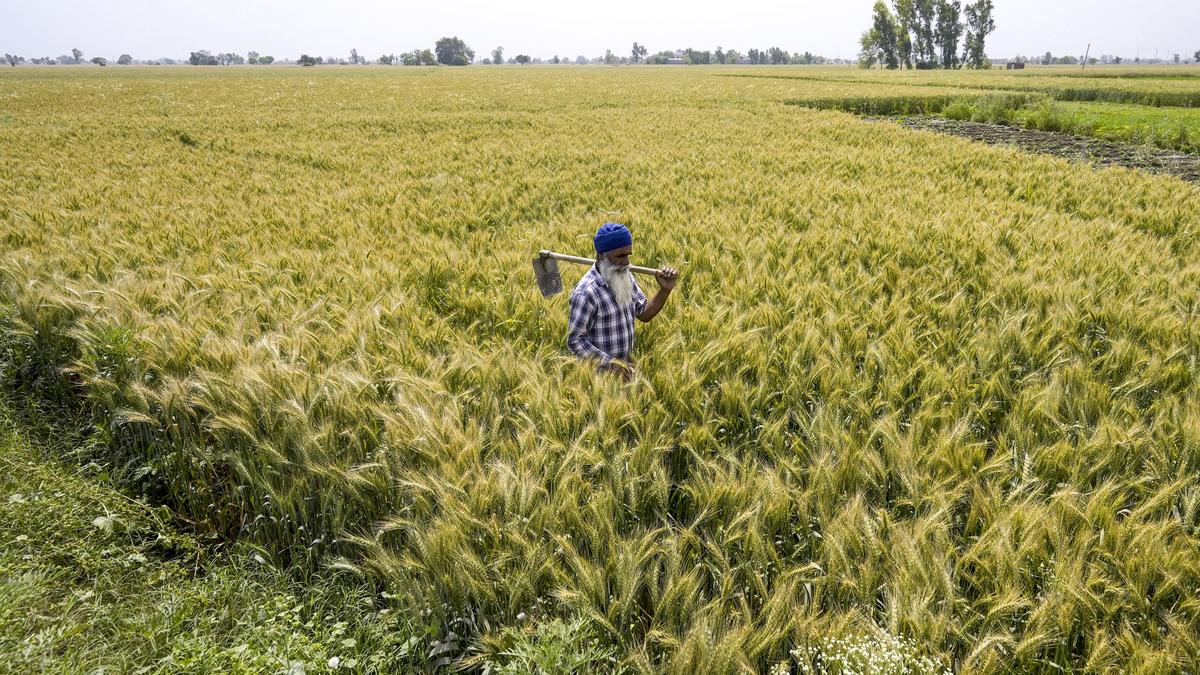
- 09 Jul 2025
In News:
India has raised strong objections to proposed amendments to the International Treaty on Plant Genetic Resources for Food and Agriculture (ITPGRFA)—also known as the Plant Treaty—during recent deliberations in Peru. The concerns stem from potential implications for India’s sovereign rights over plant genetic resources and its traditional farming practices.
About the Plant Treaty
The Plant Treaty is a legally binding international agreement, adopted by the Food and Agriculture Organization (FAO) in 2001 and enforced from 2004. India is a signatory to the treaty. It is aligned with the Convention on Biological Diversity (CBD) and supports the FAO’s Global Plan of Action.
Key Objectives:
- Conservation and sustainable use of plant genetic resources for food and agriculture (PGRFA).
- Equitable sharing of benefits arising from the use of these resources.
- Ensuring food security and preserving agrobiodiversity, especially for climate-resilient agriculture.
Core Features of the Treaty
- Multilateral System (MLS) of Access and Benefit-Sharing:
- Covers 64 major crops (e.g., rice, wheat, maize, pulses) listed in Annex I.
- Facilitates global access to plant genetic materials among member nations.
- Ensures benefit-sharing through:
- Technology transfer
- Capacity-building
- Commercialization revenues
- Standard Material Transfer Agreement (SMTA):
- A legal framework that governs the access, transfer, and exchange of genetic materials under the MLS.
- Farmers' Rights (Article 9):
- Recognizes the rights of farmers to save, use, exchange, and sell farm-saved seeds.
- Acknowledges indigenous knowledge and the contributions of local communities.
- Encourages inclusion of farmers in decision-making processes.
- Global Information System (Article 17): Facilitates data-sharing on plant genetic resources globally.
- Benefit-sharing Fund (BSF): Supports farmers and public institutions in developing countries to conserve genetic diversity, enhance crop productivity, and build resilience to pests and climate change.
India’s Concerns Over the Proposed Amendments
The new proposal seeks to expand the scope of Annex I, making it mandatory for countries to share all plant germplasm through the MLS under a uniform SMTA framework.
Why India Opposes the Proposal:
- Erosion of Sovereignty: It may weaken India’s control over its vast indigenous plant genetic wealth.
- Legal Conflict: The proposal could override India’s national laws governing access and benefit-sharing.
- Impact on Traditional Practices: Smallholder and tribal farmers who rely on traditional seed-saving and exchange systems may be adversely affected.
- Threat to Biodiversity Conservation: Centralized control over plant genetic materials could hinder community-led conservation efforts.
Alluri Sitarama Raju
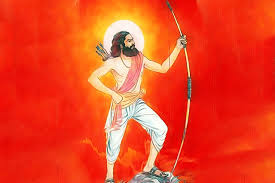
- 09 Jul 2025
In News:
During the 128th birth anniversary celebration of Alluri Sitarama Raju, the Union Defence Minister lauded his valiant role in India’s freedom movement. The Minister also reiterated the government’s commitment to ending Maoist extremism by August 2026.
Alluri Sitarama Raju
- He was a revolutionary figure revered for leading a tribal resistance against British colonial authority. Although he did not belong to a tribal community himself, he championed the cause of indigenous people, earning their deep respect and admiration.
- He was born on 4 July 1897 in Mogallu village, near Bhimavaram, located in present-day Andhra Pradesh. His revolutionary activities were concentrated in the Eastern Ghats’ Agency areas of the state.
Historical Context
- Early Life and Spiritual Turn: After receiving basic education in his village and later in Visakhapatnam, Alluri chose a life of renunciation around the age of 18. As a sanyasi, he traversed forested and hilly regions, developing a close bond with tribal communities.
- Gandhian Influence and Shift to Armed Struggle: Initially influenced by Mahatma Gandhi’s Non-Cooperation Movement, he urged tribal people to disengage from colonial institutions. However, disillusioned by the ineffectiveness of non-violence in protecting tribal rights, he resorted to armed rebellion.
- Role in the Freedom Struggle
- The Rampa Rebellion (1922–1924): Alluri became the face of the Rampa Rebellion, launched in protest against the Madras Forest Act, 1882, which curtailed traditional tribal practices like Podu cultivation and led to forced displacement. Additionally, tribals were subjected to unpaid labour for constructing colonial infrastructure, fueling widespread anger.
- Guerrilla Tactics and Resistance: Raju organized tribal youth into a guerrilla army that attacked British police outposts, looted weapons, and eliminated British officers, causing considerable concern for the colonial administration.
- Martyrdom: His growing influence and success made him a prime target for the British, who announced a ?10,000 bounty for his capture. He was eventually apprehended through deception and executed on 7 May 1924, reportedly tied to a tree and shot dead.
Legacy
- Revered as “Manyam Veerudu” or the Hero of the Jungle, Alluri’s life epitomizes courage and sacrifice.
- The Government of Andhra Pradesh commemorates July 4 as a state festival in his honour.
- He remains a powerful symbol of tribal resistance and justice in India's freedom narrative.
Nipah Virus
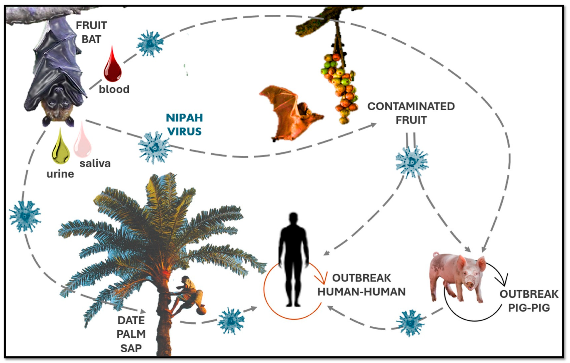
- 08 Jul 2025
In News:
The Kerala government has initiated a serological surveillance programme in response to the recurrent outbreaks of the Nipah virus (NiV) in the northern districts of the state. Notably, this marks the eighth outbreak in as many years within Kerala’s high-risk zones.
About Nipah Virus (NiV):
What is Nipah Virus?
- Zoonotic Nature: The Nipah virus is a highly infectious zoonotic pathogen, transmitted primarily from animals (especially bats) to humans.
- It can cause illnesses ranging from mild flu-like symptoms to fatal brain inflammation (encephalitis).
- Case Fatality Rate: Ranges between 40% and 75%, depending on healthcare accessibility and regional factors.
History of Outbreaks:
|
Country |
Outbreak Details |
|
Malaysia |
First outbreak recorded in 1999 among pig farmers. |
|
Bangladesh |
Repeated annual outbreaks since 2001. |
|
India |
Significant outbreaks in West Bengal (Siliguri) and Kerala (8 episodes since 2018). |
Reservoir and Transmission:
Natural Host:
- Fruit bats of the Pteropodidae family (genus Pteropus) are the natural reservoirs.
- The virus is shed through bat saliva, urine, and feces, often contaminating fruits or surfaces.
Modes of Transmission:
- Animal to Human:
- Direct contact with infected animals (especially pigs or bats).
- Consumption of contaminated items like raw date palm sap or fruit.
- Human to Human:
- Close contact with infected persons, especially bodily fluids.
- High risk in hospital settings among caregivers and healthcare workers.
Symptoms and Disease Progression:
- Initial Symptoms: Fever, headache, sore throat, muscle pain, and vomiting.
- Advanced Cases: Severe respiratory issues, seizures, encephalitis, and altered mental status.
- Incubation Period: Typically 4–14 days, may extend up to 45 days.
- Post-recovery Complications: Around 20% of survivors may suffer long-term neurological effects such as personality changes or seizures.
Diagnostic Tools:
- RT-PCR: Detects viral RNA in blood, urine, throat swabs, or cerebrospinal fluid.
- ELISA: Identifies presence of NiV-specific antibodies.
- Advanced Virology Labs: Use virus isolation and genome sequencing methods.
Kerala’s Serological Surveillance Initiative:
- The state has launched a targeted serological survey using pseudovirus neutralization assays.
- The survey focuses on human and domestic animal populations living near previously identified Nipah hotspots.
- Objectives:
- Track antibody prevalence in high-risk populations.
- Understand spillover mechanisms from animal to human.
- Identify potential animal reservoirs and transmission routes.
- Enhance early warning capabilities to prevent future outbreaks.
Pethia dibrugarhensis
- 08 Jul 2025
In News:
A team of Indian researchers has identified a new species of freshwater fish in the Brahmaputra River near Maijan, Dibrugarh (Assam). The species has been named Pethia dibrugarhensis, in reference to its place of discovery.
Discovery Details:
- The discovery was made during a freshwater biodiversity survey conducted by:
- ICAR–Central Inland Fisheries Research Institute (CIFRI) – Barrackpore & Guwahati centres
- Manipur University
- The findings were published in the international journal National Academy Science Letters (Springer Nature).
About the Species:
- Family: Cyprinidae (the carp family)
- Genus: Pethia
- Common Group: Barbs (small indigenous freshwater fish)
- Habitat: Found in moderately fast-flowing stretches of the Brahmaputra, with a mud-sand-stone substrate. It shares its habitat with other small indigenous fish species native to northeastern India.
Distinctive Characteristics:
- Incomplete lateral line
- A prominent black blotch on both dorsal and ventral sides of the caudal peduncle
- Absence of humeral marks and barbels
- These unique morphological traits set it apart from other known species in the genus Pethia.
Significance:
- The discovery highlights the rich and underexplored aquatic biodiversity of the Brahmaputra river system.
- It underscores the importance of systematic ichthyofaunal surveys for biodiversity conservation, especially in ecologically sensitive regions like the Northeast.
- According to the researchers, documenting such species is critical before they are impacted by environmental degradation and habitat loss.
AIR LORA
- 08 Jul 2025
In News:
The Indian Air Force (IAF) is reportedly exploring the procurement of AIR LORA, an advanced air-launched ballistic missile system, aimed at strengthening its long-range precision strike capability.
About AIR LORA Missile System:
- Origin: Developed by Israel Aerospace Industries (IAI), AIR LORA (Long-Range Artillery) is a next-generation air-to-surface ballistic missile designed for high-impact strike missions.
- Role: Optimized to target high-value and fortified enemy assets, such as:
- Military command centers
- Airbases
- Critical infrastructure
- Naval vessels, especially in coastal and contested maritime zones
Key Features and Specifications:
|
Parameter |
Details |
|
Length |
5.2 meters |
|
Diameter |
0.624 meters |
|
Launch Weight |
~1,600 kg |
|
Payload Capacity |
Up to 600 kg |
|
Warhead Types |
High Explosive (HE) or submunitions |
|
Maximum Range |
~400 km |
|
Speed |
Supersonic |
Technological Capabilities:
- Autonomous Fire-and-Forget System:
- Post-launch, the missile requires no further guidance from the aircraft.
- Supports mid-course re-targeting, allowing dynamic adaptation to battlefield changes.
- Navigation and Guidance:
- Employs advanced INS/GNSS (Inertial Navigation System/Global Navigation Satellite System).
- Features robust anti-jamming systems, ensuring operability in highly contested electronic warfare environments.
- Operational Versatility:
- All-weather, 24/7 deployable
- Can be integrated as a standalone weapon or via an aircraft’s avionics.
- Terminal trajectory shaping and 90° steep-attack profile enhance target precision and survivability against air defences.
- Combat Proven: Boasts high mission success rates due to its supersonic speed, GNSS immunity, and precision terminal guidance system.
Strategic Relevance for India:
- Enhances the IAF’s standoff strike capabilities, allowing engagements beyond the reach of enemy air defences.
- Provides the ability to strike deep targets with minimal risk to pilots or aircraft.
- Strengthens India's deterrence posture, especially in regions with highly fortified enemy positions or naval assets.
Atomic Energy Regulatory Board (AERB)
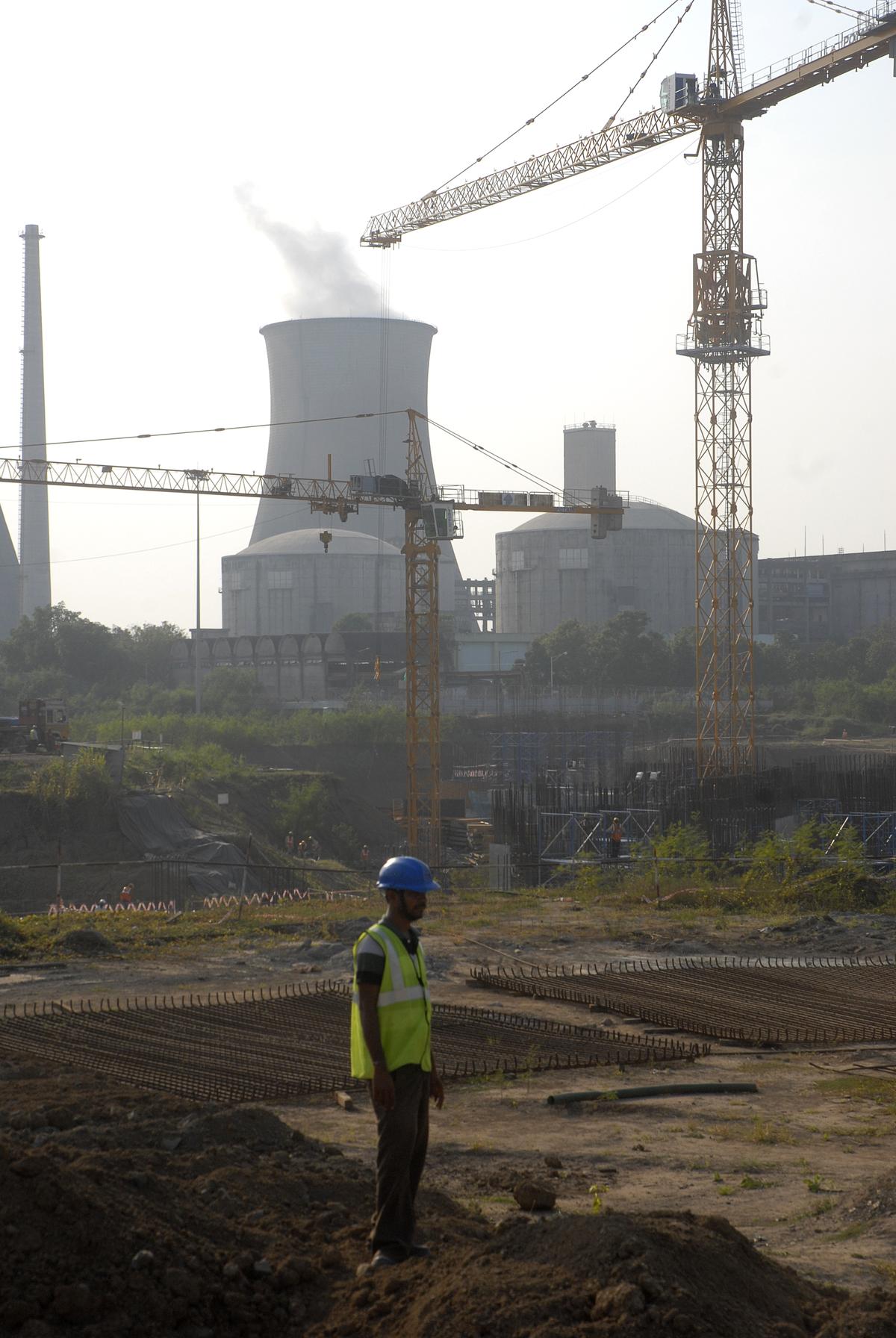
- 08 Jul 2025
In News:
India’s nuclear regulator, the Atomic Energy Regulatory Board (AERB), has granted the Licence for Operation of Units 3 and 4 of the Kakrapar Atomic Power Station (KAPS) in Gujarat — India’s first indigenously developed 700 MWe Pressurised Heavy Water Reactors (PHWRs).
Key Highlights:
- Operational Approval: The AERB concluded multi-stage design and commissioning safety reviews before granting the licence for both reactors.
- KAPS-3: Achieved full-power commissioning in August 2023.
- KAPS-4: Achieved full-power commissioning in August 2024.
- Licence Details:
- Issued on July 3, 2025.
- Valid for a period of five years.
- Granted to the Nuclear Power Corporation of India Limited (NPCIL).
Significance of the Development:
- These reactors are part of India’s first fleet of 700 MWe PHWRs, marking a major milestone in the country’s indigenous nuclear energy capabilities.
- The licensing process involved rigorous multi-tiered safety assessments spanning the full lifecycle:
- Siting
- Construction
- Commissioning
- Full-power operation
- Review was conducted with contributions from AERB and technical support organisations, involving over 15 years of evaluation.
India’s PHWR Progression:
|
Design |
Capacity |
Number |
Remarks |
|
PHWR |
220 MWe |
15 |
Operational |
|
PHWR |
540 MWe |
2 |
Operational |
|
PHWR |
700 MWe |
2 (KAPS-3 & 4) |
Now Licensed |
- The 700 MWe PHWR design is an upgraded version of the 540 MWe model.
- A similar 700 MWe reactor began commercial operation at Rawatbhata (Rajasthan) in March 2025.
Broader Impact:
- The licence is a boost to NPCIL’s fleet-mode approach, which involves building 10 such 700 MWe PHWRs across India.
- It reinforces India’s commitment to self-reliance in nuclear technology under the broader Atmanirbhar Bharat initiative.
- It enhances the nation's ability to meet low-carbon energy targets through domestic nuclear capacity.
National Biobank
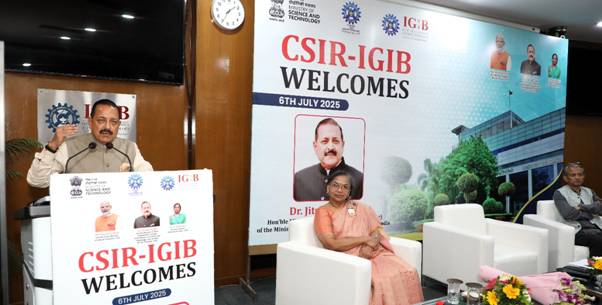
- 08 Jul 2025
In News:
The Union Minister of State (Independent Charge) for Science & Technology recently inaugurated the Phenome India “National Biobank” at the CSIR-Institute of Genomics and Integrative Biology (IGIB).
About the National Biobank:
- The National Biobank will act as the backbone of a nationwide cohort study, aimed at collecting comprehensive genomic, lifestyle, and clinical data from 10,000 individuals across India.
- It is a part of the Phenome India Project, focusing on long-term health tracking of participants over several years.
- Designed to reflect India's diverse geography, ethnicity, and socio-economic backgrounds, it ensures inclusivity in data collection.
- The biobank will enable researchers to:
- Uncover disease patterns and gene-environment interactions.
- Study individual responses to therapies within the Indian population context.
- Aid in early diagnosis and precision medicine, especially for complex diseases like:
- Diabetes
- Cancer
- Cardiovascular disorders
- Rare genetic conditions
Phenome India Project (PI-CheCK):
- Full Name: Phenome India – CSIR Health Cohort Knowledgebase (PI-CheCK)
- Launched by: Council of Scientific and Industrial Research (CSIR) on 7th December 2023
- Objective: To build India-specific risk prediction models for cardio-metabolic diseases, including:
- Diabetes
- Liver diseases
- Cardiac conditions
- Significance: India’s first pan-India longitudinal health monitoring study focused specifically on cardio-metabolic health.
- Sample Cohort: ~10,000 individuals (primarily CSIR employees, pensioners, and spouses) from 17 states and 24 cities.
- Data Collection Includes:
- Clinical questionnaires
- Lifestyle and dietary assessments
- Anthropometric measurements
- Imaging and scanning data
- Extensive biochemical and molecular data
Green Climate Fund
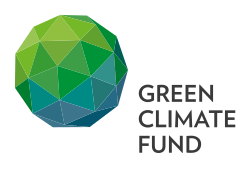
- 07 Jul 2025
In News:
- The Green Climate Fund (GCF) has approved over USD 120 million to support climate adaptation initiatives in Ghana, the Maldives, and Mauritania, with technical development by the UN Environment Programme (UNEP).
- The projects aim to build climate resilience among vulnerable populations through nature-based solutions, climate-resilient agriculture, early warning systems, and water security enhancements.
- These initiatives are critical in delivering adaptation finance to regions like Small Island Developing States (SIDS) and the Sahel, addressing some of the most urgent climate vulnerabilities and are expected to benefit over 3.5 million people.
Project Highlights by Country:
Ghana: Agroecological Resilience in Northern Regions
- Total funding: USD 70 million (USD 63 million GCF grant).
- Objective: Strengthen climate resilience in eight districts across North East, Upper East, and Upper West Ghana.
- Key Interventions:
- Improve access to climate data and early warnings.
- Enable dry-season farming via water storage.
- Restore 28,000 hectares of degraded land to improve water retention and soil health.
- Impact:
- Direct benefits for 619,000 people.
- Early warning systems to reach 2.9 million.
- Improved food security for 120,000 individuals.
- Implementing agencies: Ghana EPA and Ghana Meteorological Agency.
Maldives: Early Warning and Risk Reduction in a SIDS
- Total funding: USD 25 million.
- Project Name: Toward Risk-Aware and Climate-Resilient Communities (TRACT).
- Focus: Expand multi-hazard early warning systems and build national capacity under the Early Warnings for All (EW4All) initiative.
- Risks Addressed: Rising sea levels, storm surges, heatwaves, and coastal erosion threatening agriculture, fisheries, and tourism.
- Impact:
- Coverage for over 500,000 people.
- Special emphasis on remote and marginalized communities, including women and children.
Mauritania: Ecosystem Restoration in the Sahel
- Total funding: USD 33 million (USD 30 million GCF grant).
- Objective: Address desertification, drought, and water scarcity across four vulnerable regions.
- Key Activities:
- Build green-grey infrastructure to stabilize sand dunes.
- Improve water access for farming and land rehabilitation.
- Promote climate-resilient agriculture to reduce food imports.
- Impact:
- 85,000 people to benefit directly; 145,000 indirectly.
- 2,100 hectares of land to be protected.
- Supports the Great Green Wall Initiative—Africa’s flagship response to desertification.
Institutional Roles and Significance:
- The UNEP, as a global leader in environmental governance, has played a key role in contextualizing science-based, locally led climate solutions.
- The GCF, under the Paris Agreement framework, remains the largest international climate fund, supporting countries in implementing their Nationally Determined Contributions (NDCs).
Chautal
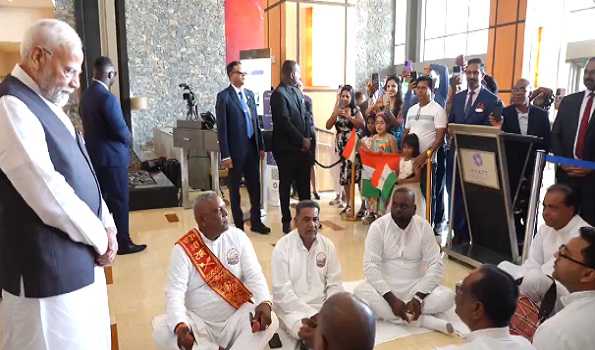
- 07 Jul 2025
In News:
During the recent state visit of the Indian Prime Minister to Trinidad and Tobago, a notable cultural highlight was the performance of the traditional Bhojpuri Chautal, reflecting the deep-rooted Indian heritage in the Caribbean diaspora.
Understanding Chautal
- Chautal (also spelled Chartaal or Chowtaal) is a 12-beat rhythmic cycle (taal) integral to Hindustani classical music.
- It is primarily used to accompany vocal forms such as Dhrupad and Dhamar, as well as instrumental music.
- The term “Chautal” can be interpreted as "four claps", hinting at its vibhag (sectional) structure.
Structural Interpretations:
- One tradition describes it as comprising four vibhags of 4, 4, 2, and 2 beats (matras), respectively.
- An alternative view equates its structure with Ektal, dividing the cycle into six segments of 2 beats each.
Musical Characteristics and Cultural Context
- Chautal is closely associated with the pakhawaj, a barrel-shaped percussion instrument, giving it a powerful and resonant character.
- Unlike the subtle and intricate rhythms of the tabla, Chautal emphasizes strength and gravity in performance.
- Beyond classical settings, Chautal holds cultural significance in Bhojpuri folk traditions, especially during festivals and religious gatherings.
Significance in the Indian Diaspora
The inclusion of Chautal in Trinidad and Tobago’s ceremonial welcome reflects the preservation and celebration of Indian classical and folk arts among overseas Indian communities, particularly those with Bhojpuri ancestry.
Gini Index
- 07 Jul 2025
In News:
According to the World Bank’s Spring 2025 Poverty and Equity Brief, India has emerged as the fourth most equal society globally, with a Gini Index of 25.5—outperforming all G7 and G20 nations. Only the Slovak Republic (24.1), Slovenia (24.3), and Belarus (24.4) rank ahead.
This achievement marks a significant improvement from India’s Gini score of 28.8 in 2011 to 25.5 in 2022, reflecting a steady narrowing of income inequality and growing social equity.
Key Highlights:
Gini Index Comparison (2022-2023):
|
Country |
Gini Index |
|
Slovak Republic |
24.1 |
|
Slovenia |
24.3 |
|
Belarus |
24.4 |
|
India |
25.5 |
|
China |
35.7 |
|
United States |
41.8 |
|
Germany (G7) |
~31.4 |
|
United Kingdom (G7) |
~34.4 |
|
France (G7) |
~32.4 |
|
Japan (G7) |
~32.9 |
Poverty Reduction Achievements:
- 171 million people lifted out of extreme poverty (2011–2023).
- Population living under $2.15/day fell from 16.2% (2011–12) to 2.3% (2022–23).
- Under revised poverty line of $3.00/day, poverty fell to 5.3% in 2022–23.
Drivers of Income Equality:
a) Financial Inclusion:
- Jan Dhan Yojana: Over 55.69 crore bank accounts opened (as of June 2025).
- Enabled Direct Benefit Transfers (DBT), reducing leakages and ensuring targeted welfare.
b) Digital Infrastructure:
- Aadhaar: Over 142 crore issued (as of July 2025), enabling real-time, identity-based service delivery.
- DBT savings: Over ?3.48 lakh crore by March 2023.
c) Universal Healthcare Access:
- Ayushman Bharat: Over 41.34 crore health cards issued.
- Covers ?5 lakh per family/year; now extended to all citizens aged 70+ under Ayushman Vay Vandana.
- Over 32,000 empanelled hospitals ensure access to treatment.
d) Empowerment of Marginalized Communities:
- Stand-Up India: Loans worth ?62,807 crore disbursed to SC/ST and women entrepreneurs.
- PM Vishwakarma Yojana: Nearly 30 lakh artisans registered for credit and marketing support.
Significance for India and the World:
India’s low Gini score demonstrates that economic growth and social equity can be pursued together. The country’s targeted welfare architecture, digital governance tools, and inclusive schemes have created a replicable model for other developing nations.
As global inequality widens, India’s success offers a template for countries seeking to integrate economic reforms with social protection mechanisms to foster inclusive development.
Tokara Islands
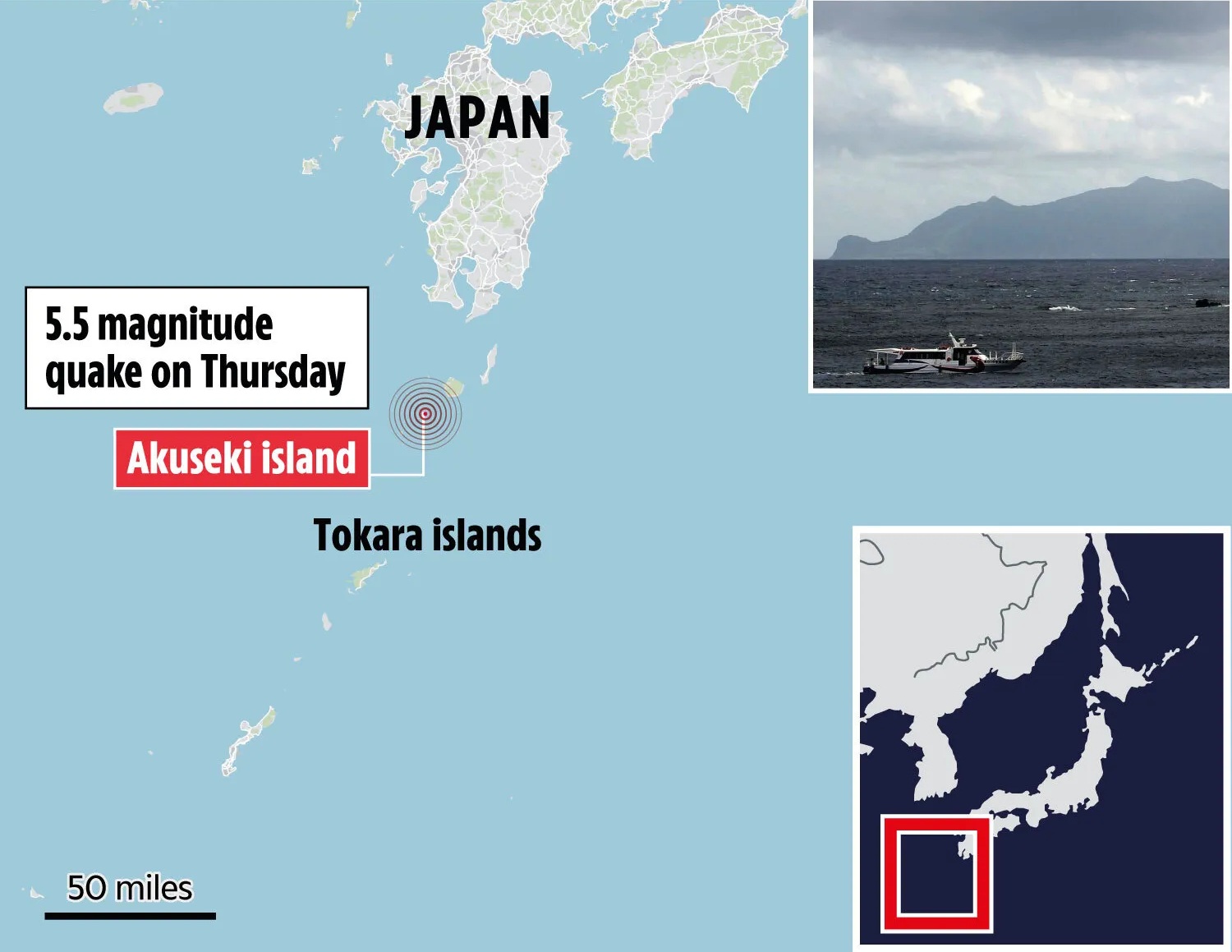
- 07 Jul 2025
In News:
In an unusual seismic episode, over 1,000 earthquakes have struck the Tokara Islands in southern Japan since June 1, 2025, triggering panic, evacuation orders, and heightened concerns about a potential larger earthquake. The persistent tremors—several of which registered magnitudes of 5.5 or higher—have had a significant psychological and logistical impact on the island's residents.
About Tokara Islands:
- Located south of Kyushu and north of the Amami Islands, the Tokara archipelago (also called Toshima Islands) consists of seven inhabited and five uninhabited islands.
- The inhabited islands include Kuchinoshima, Nakanoshima, Suwanosejima, Tairajima, Akusekijima, Kodakarajima, and Takarajima.
- Administered by Toshima Village, it is Japan’s longest village, stretching over 160 km.
- Nakanoshima is the largest and most populated island; it is dominated by Mount Otake (979 m).
- The islands lie in a subtropical-temperate climate zone, receiving around 2,700 mm of rainfall annually.
- Geologically, they are situated in one of the most earthquake-prone zones globally.
Variable Rate Reverse Repo (VRRR)
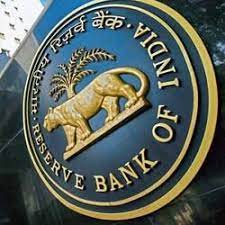
- 07 Jul 2025
In News:
The Reserve Bank of India (RBI) recently carried out a 7-day Variable Rate Reverse Repo (VRRR) auction worth ?1 lakh crore. This measure was taken to manage the surplus liquidity in the banking system, which had surged to approximately ?3.75 lakh crore.
What is VRRR?
The Variable Rate Reverse Repo (VRRR) is a liquidity management tool employed by the RBI to absorb excess funds from commercial banks for a specified period. Unlike the fixed reverse repo rate, the VRRR rate is determined through an auction mechanism, allowing market forces to decide the interest rate.
Key Characteristics:
- Auction-Based Interest Rate: Interest is not fixed but discovered through competitive bidding.
- Time-Bound Operation: Typically conducted for durations like 7, 14, or 28 days.
- Liquidity Management Tool: Helps the RBI withdraw excess liquidity from the financial system.
- Repo Rate Ceiling: The interest rate in VRRR operations cannot exceed the current repo rate.
- Flexible Tenor: RBI may modify the duration of VRRR auctions based on prevailing liquidity conditions.
Objective of VRRR
- To mop up surplus liquidity from the banking system.
- To help regulate short-term interest rates and support effective transmission of monetary policy.
- To foster a market-driven interest rate environment in the short-term interbank market.
How VRRR Functions
- Auction Announcement: RBI declares the amount and duration of the VRRR operation.
- Bid Submission: Banks submit bids with the amount and the interest rate at which they are willing to park funds with RBI.
- Rate Determination: RBI accepts bids at or above the cut-off rate, determined by the auction.
- Interest Earnings: Banks earn interest at the accepted rate over the auction tenure.
Implications of VRRR Operations
- On the Money Market: Tightens liquidity, leading to an uptick in short-term rates such as the call money rate and TREPS.
- On the Bond Market: May cause short-term government and corporate bond yields to rise, increasing borrowing costs.
- On Banks:
- Offers an avenue to earn returns on idle funds, improving short-term profitability.
- Temporarily locks up funds, which may reduce immediate availability for lending or investment.
This mechanism is a vital part of the RBI's toolkit to maintain financial stability and ensure efficient transmission of monetary policy.
3 by 35 Initiative
- 06 Jul 2025
In News:
Amid shrinking official development assistance (ODA) and growing health burdens, the World Health Organization (WHO) has launched the 3 by 35 Initiative—a global call to action to increase taxes on three harmful products: tobacco, alcohol, and sugary drinks. The goal is to raise their real prices by at least 50% by the year 2035, tailored to each country’s context.
Why the Initiative?
- Noncommunicable Diseases (NCDs)—like cardiovascular diseases, cancers, and diabetes—are the leading cause of death and disability worldwide.
- Tobacco use causes over 7 million deaths annually; alcohol and sugary drinks significantly contribute to the global NCD burden.
- Health taxes are a proven strategy to curb harmful consumption while generating domestic revenue for health and development.
Economic Potential:
- A one-time 50% price increase via taxation could generate:
- US$ 3.7 trillion over five years
- ~US$ 740 billion per year (approx. 0.75% of global GDP)
- Estimated to raise US$ 1 trillion in public revenue over the next decade while reducing product consumption.
Key Objectives of 3 by 35:
- Reduce Harmful Consumption:
- Discourage use of tobacco, alcohol, and sugary drinks.
- Mitigate NCDs and associated healthcare costs.
- Mobilize Domestic Revenue:
- Strengthen public financing without reliance on external aid.
- Support progress toward Sustainable Development Goals (SDGs).
- Build Healthier, Resilient Economies:
- Improve economic productivity through healthier populations.
- Channel revenue toward health services, nutrition, and education.
Strategic Actions:
- Mobilize Countries:
- Engage leaders, finance and health ministries, and civil society.
- Provide platforms for peer learning and global recognition.
- Support Country-Led Policies:
- Offer technical support for health tax design, legal reform, and implementation.
- Promote evidence-based, locally tailored solutions.
- Build Commitments and Partnerships:
- Foster multi-sector collaboration and civil society engagement.
- Shift public and political narratives around health taxation.
Governance and Collaboration:
- Led by WHO and supported by:
- National governments
- Civil society and academic institutions
- Development partners and multilateral organizations
C-FLOOD
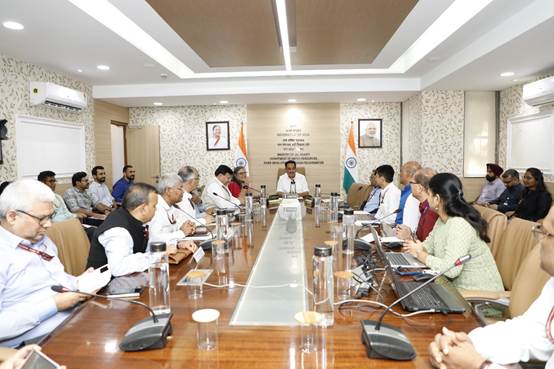
- 06 Jul 2025
In News:
In a significant advancement in disaster risk management, Union Minister of Jal Shakti Shri C.R. Patil inaugurated C-FLOOD, a Unified Inundation Forecasting System. Developed under the National Supercomputing Mission (NSM), C-FLOOD marks a pivotal step toward strengthening India's flood preparedness and mitigation strategy.
What is C-FLOOD?
C-FLOOD is a web-based, real-time flood forecasting platform designed to deliver two-day advance inundation forecasts at village-level resolution. It provides:
- Flood inundation maps
- Water level predictions
- Localized early warnings to support disaster response and planning.
Developing Agencies:
- Centre for Development of Advanced Computing (C-DAC), Pune
- Central Water Commission (CWC)
- National Remote Sensing Centre (NRSC)
Developed in collaboration with the Ministry of Jal Shakti, Ministry of Electronics & IT (MeitY), and Department of Science & Technology (DST).
Key Features:
- 2-Day Village-Level Forecasts: Localized and high-resolution predictions up to the gram panchayat level.
- Advanced 2-D Hydrodynamic Modelling: Simulations run on High-Performance Computing (HPC) systems under NSM.
- Multi-Basin Coverage: Initially operational in the Mahanadi, Godavari, and Tapi river basins, with future expansion planned.
- Unified Data Integration: Combines outputs from national and regional flood models into one platform.
- Disaster Portal Linkage: Designed for integration with the National Disaster Management Emergency Response Portal (NDEM).
- Climate-Adaptive Governance: Supports flood forecasting in regions vulnerable to climate-induced extreme weather events.
Strategic Importance:
- Disaster Risk Reduction: Enables timely warnings, efficient evacuations, and minimizes loss of life and property.
- Scientific & Operational Integration: Bridges hydrological modelling with on-ground responses.
- Supports Viksit Bharat @2047 Vision: Contributes to climate-resilient water governance.
- Promotes Inter-Agency Synergy: Encourages coordination among CWC, C-DAC, NRSC, and disaster management bodies.
Government Directions and Future Path:
During the inauguration, the Union Minister emphasized:
- Wide dissemination of C-FLOOD to enhance public awareness.
- Expansion to all major river basins through comprehensive inundation studies.
- Improved accuracy via satellite data validation and ground-truthing.
- Integration with NDEM for real-time emergency response.
The minister lauded the collaborative spirit of CWC, C-DAC, and NRSC, and reaffirmed the government's commitment to proactive and technology-driven disaster management.
Status of Youth in Agrifood Systems
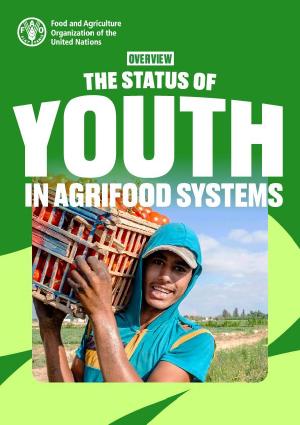
- 06 Jul 2025
In News:
The Food and Agriculture Organization (FAO) has released the “Status of Youth in Agrifood Systems” report, emphasizing that youth empowerment in agriculture could significantly reduce global unemployment and enhance food security, with the potential to boost global GDP by 1.4% (approx. $1.5 trillion).
Key Insights from the Report:
Declining Youth Engagement in Agriculture:
- The share of youth employed in agrifood systems has dropped from 54% in 2005 to 44%, even though many low-income countries remain heavily dependent on youth labour in agriculture.
Youth NEET Crisis:
- Over 20% of global youth (ages 15–24) are Not in Employment, Education, or Training (NEET).
- Young women are twice as likely to fall into this category compared to men.
- Addressing NEET status, particularly among those aged 20–24, could raise global output, with 45% of potential gains stemming from agrifood-related employment.
Urban-Rural Divide:
- 54% of youth now reside in urban areas, while only 5% of rural youth participate in industrial agrifood systems — posing challenges for future agricultural labour availability.
Climate Vulnerability:
- Around 395 million rural youth live in regions projected to experience reduced agricultural productivity due to climate change and extreme weather events.
Rising Food Insecurity Among Youth:
- Youth facing moderate to severe food insecurity has grown from 16.7% (2014) to 24.4% (2023), with severe impacts in Africa and conflict-affected areas.
FAO’s Strategic Recommendations:
Inquire More:
- Close data gaps related to youth roles in agrifood systems.
- Promote evidence-based, youth-responsive policies.
Include More:
- Ensure youth participation in decision-making at local, national, and international levels.
- Foster inclusive governance for both rural and urban youth.
Invest More:
- Job Creation: Facilitate decent employment opportunities on farms and in agrifood value chains.
- System Modernization: Invest in rural infrastructure, digital tools, and agricultural innovation.
- Resource Access: Improve youth access to land, credit, markets, training, and technology.
- Safe Migration: Develop regulated migration pathways for youth involved in agriculture and related sectors.
Russia recognizes Taliban-led Government in Afghanistan
- 06 Jul 2025
In News:
Russia has become the first nation to officially recognize the Taliban-led Islamic Emirate of Afghanistan, formalizing diplomatic relations with the regime that took control in 2021.
Context and Significance:
- This development comes amid limited international recognition of the Taliban government, which took over Kabul in 2021 after the withdrawal of U.S. and NATO forces.
- Russia’s move could reshape regional diplomacy in Central and South Asia, potentially influencing other neighboring powers like China, Iran, and the UAE, which has also shown warming ties.
- The decision also reflects Russia's strategic interests in counterterrorism cooperation, regional stability, and its broader geopolitical competition with the West.
Profile of Russia
Geographical Overview:
- Continent: Northern Eurasia, straddling both Eastern Europe and Northern Asia
- Area: Approximately 17 million square kilometers, making it the largest country in the world
- Time Zones: Spans across 11 time zones
- Capital City: Moscow
Neighbours and Boundaries:
- Land Borders: Shares land borders with 16 countries—more than any other nation:
- In Europe: Norway, Finland, Estonia, Latvia, Lithuania, Poland (via Kaliningrad), Belarus, Ukraine
- In Asia: Georgia, Azerbaijan, Kazakhstan, Mongolia, China, North Korea
- Maritime Borders:
- United States (via the Bering Strait)
- Japan (via the Sea of Okhotsk)
- Major Mountain Ranges:
- Ural Mountains: Traditional boundary between Europe and Asia
- Caucasus Mountains: Includes Mount Elbrus, Europe’s highest peak
- Altai, Sayan, and Kamchatka ranges in Siberia
- Key Rivers and Lakes:
- Volga River: Longest river in Europe
- Lena, Yenisei, and Ob Rivers: Flow through Siberia into the Arctic Ocean
- Lake Baikal: World’s deepest and oldest freshwater lake
- Lake Ladoga: Largest lake in Europe by area
- Climatic and Vegetation Zones:
- Encompasses tundra, taiga (boreal forest), steppes, and semi-deserts
- Permafrost regions in Siberia restrict infrastructure and habitation
Roll Cloud
- 06 Jul 2025
In News:
A striking atmospheric event unfolded over Portugal’s coastline during a severe European heatwave, where beachgoers and weather enthusiasts witnessed a rare roll cloud. The phenomenon occurred as cooler Atlantic air met the hot, dry continental air, producing a visually stunning and scientifically intriguing cloud formation.
What is a Roll Cloud?
A roll cloud is an uncommon, tube-shaped, low-altitude cloud formation that appears to rotate horizontally along its axis. Unlike funnel clouds, it is not connected to any thunderstorm base or rotating system.
Typical Occurrence Zones:
- Frequently spotted in coastal areas, particularly where oceanic and continental air masses interact
- Notably seen in regions like:
- U.S. Great Plains
- Gulf of Carpentaria, Australia (famous for “Morning Glory” clouds)
- Atlantic coasts of Europe
Formation Mechanism:
- Air Mass Interaction: Roll clouds develop when cool, moist maritime air confronts hot, dry air from land, creating instability.
- Temperature Inversion: A thermal inversion layer traps cooler air beneath a warmer layer, suppressing vertical air movement.
- Gravity Waves: As dense cool air undercuts warm air, it creates gravity waves—oscillations within the lower atmosphere.
- Adiabatic Cooling: The ascending portion of the wave cools rapidly, leading to condensation and cloud formation.
- Detached Structure: The cloud remains independent of any parent cloud system, often forming a long, horizontal roll.
Cloud Characteristics:
- Shape: Long, tubular, and low-lying—can stretch over hundreds of kilometers
- Motion: Appears to roll horizontally like a barrel
- Timing: Often forms during early morning hours
- Orientation: Aligns with low-level wind flow, sometimes influenced by sea breeze or nocturnal land breeze fronts
Why are Roll Clouds important?
- Serve as visual indicators of atmospheric instability and changing weather conditions
- Though not hazardous, they reflect mesoscale meteorological processes
- May signal localized shifts in temperature or wind that could precede storm activity in some environments
- Their presence also highlights the interplay between land-sea thermal contrasts, especially relevant in the context of climate variability
Motor Vehicle Aggregator Guidelines (MVAG) 2025
- 05 Jul 2025
In News:
The Ministry of Road Transport and Highways has released the Motor Vehicle Aggregator Guidelines (MVAG), 2025, updating the 2020 norms to accommodate evolving urban transport trends — including bike taxis, electric vehicles (EVs), and app-based autorickshaws.
Overview
- Legal Basis: Formulated under the Motor Vehicles Act, 1988, MVAG provides the regulatory foundation for digital ride-hailing platforms such as Ola, Uber, and Rapido.
- Issuing Authority: Ministry of Road Transport and Highways, Government of India
Key Provisions of MVAG 2025
Driver Welfare and Remuneration
- Revenue Sharing:
- Drivers using own vehicles must receive minimum 80% of the fare.
- For aggregator-owned vehicles, the share must be at least 60%.
- Insurance Requirements:
- Health cover of ?5 lakh
- Term life insurance of ?10 lakh for each driver
- Skill Enhancement: Drivers in the lowest 5% rating bracket to undergo quarterly training
Passenger Safety and Accountability
- Travel Insurance: Mandatory coverage of ?5 lakh per passenger
- Complaint Resolution:
- Issues must be addressed within 3 working days
- Aggregators must notify passengers of outcomes
- Fare Transparency: Charges apply only from pick-up to drop-off location
Fare Regulation and Surge Pricing
- Base Fare Governance: State governments to decide base fare for each vehicle type
- Dynamic Pricing Limits:
- Aggregators may charge as low as 50% below base fare or up to 2x the base fare cap
- Designed to curb excessive surge pricing and ensure fare predictability
Cancellation Penalties
- Symmetrical Accountability:
- 10% penalty (capped at ?100) for riders or drivers cancelling without valid reason
- Acceptable cancellation grounds must be clearly listed on platforms
Legitimisation of Bike Taxis
- Policy Recognition:
- For the first time, private two-wheelers (non-transport motorcycles) may be used for commercial ride services, pending state-level approval
- Legal clarity for platforms operating in regulatory grey zones
EV Integration and Inclusivity
- EV Adoption Targets: States may enforce annual targets for aggregator fleets to switch to electric vehicles
- Accessible Vehicles Mandate: Aggregators must include vehicles equipped to serve persons with disabilities (Divyangjan)
Enhanced Driver Onboarding Standards
- Screening and Health Protocols: Mandatory police verification, medical fitness, and psychological evaluation before onboarding
- Training Mandates: Induction training for new drivers and annual refresher programs for all
Grievance Redressal & Licensing
- Mandatory Officer Appointment: A Grievance Redressal Officer must be designated with contact details published on the platform
- Centralised Licensing Portal: A unified digital portal to streamline aggregator licensing, renewals, and deposit management
Enforcement and Penalties
- Penalty Range: Fines for non-compliance range from ?1 lakh to ?1 crore
- Escalation for Repeat Offences: Repeat violations can lead to license suspension (up to 3 months) and possible revocation
Significance of MVAG 2025
- Aligns India’s mobility ecosystem with sustainable transport goals, passenger safety, and driver welfare
- Encourages EV transition, inclusive access, and regulated digital transport economy
- Brings regulatory clarity for emerging services like bike taxis
RBI’s New Policy on Pre-Payment Charges
- 05 Jul 2025
In News:
In a move aimed at enhancing fair lending practices and improving access to affordable credit, the Reserve Bank of India (RBI) has prohibited pre-payment penalties on floating-rate loans availed by individuals and Micro and Small Enterprises (MSEs). The new norms will come into effect from January 1, 2026, and will apply to all loans and credit facilities sanctioned or renewed on or after this date.
Key Provisions of the RBI Guidelines
Ban on Pre-Payment Charges:
- Applicable to:
- Individuals taking floating-rate loans for non-business purposes, even with co-borrowers.
- Individuals and MSEs availing business loans.
- Individuals taking floating-rate loans for non-business purposes, even with co-borrowers.
- Lenders prohibited from imposing pre-payment penalties include:
- Commercial Banks (except SFBs, RRBs, Local Area Banks)
- Tier 4 Urban Cooperative Banks
- NBFCs in the Upper Layer (NBFC-UL)
- All India Financial Institutions (AIFIs)
- For smaller institutions like Small Finance Banks, RRBs, Tier 3 Urban Cooperative Banks, State and Central Co-op Banks, and NBFCs in the Middle Layer (NBFC-ML), the exemption from pre-payment charges applies to loans up to ?50 lakh.
Early Closure of Overdraft/Cash Credit:
- If the borrower informs in advance and closes the account on time, no pre-closure charges can be levied.
- If the lender requests prepayment, no charges are permitted in such cases either.
Transparency and Disclosure Requirements
- Lenders must clearly disclose the applicability or non-applicability of pre-payment charges in:
- Sanction letters
- Loan agreements
- Key Facts Statement (KFS) (where applicable)
- Any charges not explicitly disclosed as per these guidelines cannot be imposed.
Pre-Payment Without Lock-in
- Pre-payment (partial or full) can be made without any lock-in period, and irrespective of the source of funds.
Rationale Behind the Move
- The RBI noted that inconsistent practices regarding pre-payment fees have led to customer disputes.
- Ensuring easy and affordable finance for MSEs is “of paramount importance,” the central bank emphasized.
Policy Continuity and Legal Update
- All earlier RBI circulars and guidelines regarding pre-payment charges stand repealed.
- The final guidelines were issued after considering public feedback on the draft circular (February 2025).
Significance for MSEs and Borrowers
- Enhances credit mobility and refinancing freedom for borrowers.
- Prevents penalty-driven disincentives for early loan closure.
- Aligns with the RBI’s broader goal of financial consumer protection and MSME support.
Overseas Citizen of India (OCI)
- 05 Jul 2025
In News:
During his official visit to Trinidad and Tobago, the Prime Minister of India announced a significant policy update: Indian-origin persons up to the sixth generation residing in Trinidad and Tobago will now be eligible for the Overseas Citizen of India (OCI) card.
This move strengthens India's outreach to its diaspora, especially in regions with deep-rooted historical ties dating back to indentured migration.
About Overseas Citizen of India (OCI)
What is OCI?
The OCI card is a form of permanent residency granted to foreign nationals of Indian origin, enabling them to live, work, and travel in India without requiring a visa.
- Introduced: August 2005
- Legal Basis: Citizenship (Amendment) Act, 2005
- Administered by: Ministry of Home Affairs, Government of India
- Objective: To foster long-term engagement between India and its diaspora communities by offering them residency and economic/cultural participation rights—without conferring dual citizenship.
Eligibility Criteria (Section 7A of Citizenship Act, 1955)
An individual is eligible if they are a foreign national who:
- Was a citizen of India on or after 26 January 1950,
- Was eligible for Indian citizenship on that date, or
- Belonged to a territory that became part of India after 15 August 1947
Also eligible:
- Children, grandchildren, or great-grandchildren of eligible persons
- Minor children with one or both parents as Indian citizens
- Spouses of Indian citizens or OCI holders, if marriage has lasted 2+ years
Not eligible if: The individual or their ancestors were ever citizens of Pakistan, Bangladesh, or other countries notified by the Indian government
Key Features of the OCI Card
- Lifelong, multiple-entry visa to India
- No police reporting required, regardless of duration of stay
- Work and study rights similar to Indian citizens (no separate visa needed)
- Economic parity with NRIs in areas such as:
- Education (e.g., admissions, fee structure)
- Financial services and bank accounts
- Real estate (excluding agricultural land)
- Can buy residential and commercial property in India
- Not eligible for:
- Voting rights
- Holding constitutional posts (e.g., President, MP, Judge)
- Government employment
- Digital-friendly: Application, renewal, and status tracking available via the official OCI Portal
Significance of the Latest Announcement
- Extending OCI eligibility to the sixth generation acknowledges the deep historical diaspora links between India and the Caribbean, particularly descendants of indentured laborers.
- This strengthens India's soft power, promotes people-to-people diplomacy, and enhances economic and cultural ties with Indian-origin communities abroad.
India’s First Transgender Clinic
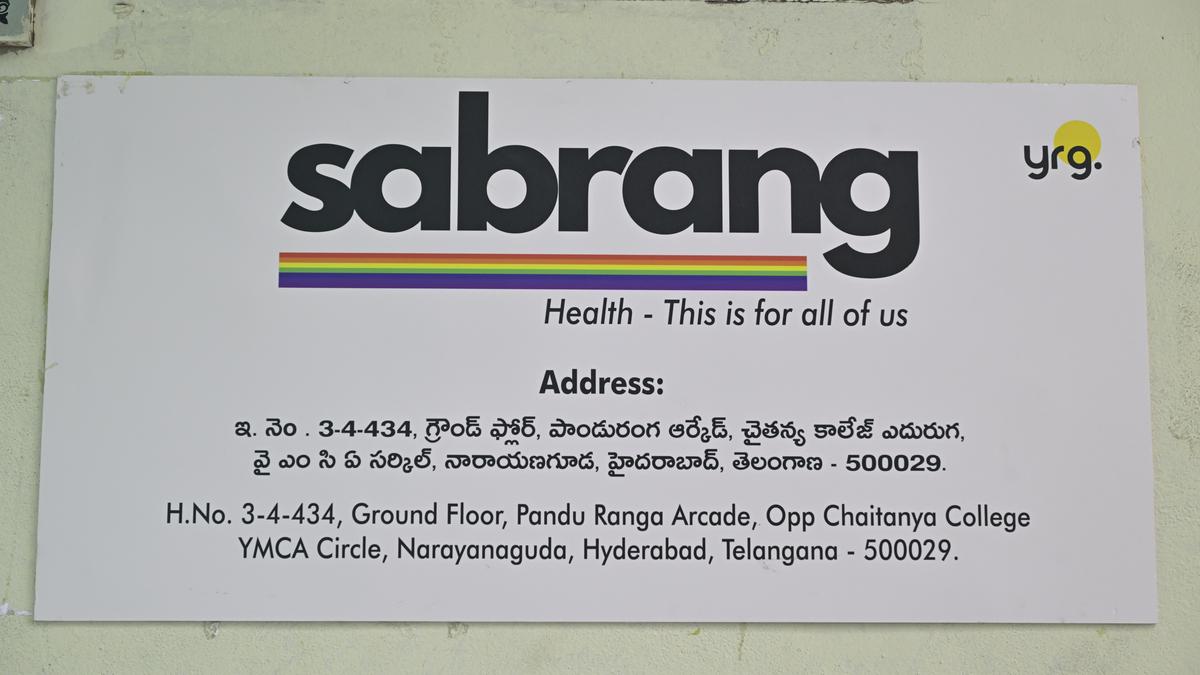
- 05 Jul 2025
In News:
India’s first healthcare facility entirely led and managed by transgender individuals — formerly known as Mitr Clinic — has reopened in Hyderabad under a new name, Sabrang Clinic, after a brief closure in January 2025 due to a USAID funding freeze.
Launched in 2021 in Narayanguda, Mitr Clinic was a pioneering initiative providing trans-affirmative healthcare services, and was notable for being completely staffed by members of the transgender community. Over 3,000 patients were served during its initial phase.
Revival and Funding
- Funding Setback: Operations were suspended in January 2025 following the withdrawal of USAID support.
- Renewed Support: The clinic resumed services in May 2025 after securing three-year funding from Tata Trusts, at a rate of ?1,500 per person per year (compared to ?1,900 under USAID).
- Supporting Partners: Core clinical staff is now funded by Tata Trusts, while senior positions are jointly supported by YRG Care, an NGO associated with the earlier model.
Current Setup and Services
Services Offered:
- General health services
- Counselling and clinical consultations for:
- Hormone Replacement Therapy (HRT)
- Gender Affirmation Surgeries
- Breast Augmentation
- Mental Health
- HIV/STI testing and treatment
- Psychological support
Clinic Team:
- 1 Medical Officer
- 1 Nurse
- 1 Counsellor
- 2 Outreach Workers
Operating Hours: Monday to Saturday, 10 a.m. – 6 p.m.
During the shutdown, the team continued online consultations and medicine delivery, sustaining community outreach until new funding was secured.
Legacy and Policy Impact
- The Telangana Government, inspired by Mitr Clinic’s model, launched Maitri Clinics in all 33 districts, adopting a trans-inclusive healthcare approach.
- While collaboration with State agencies was considered, the Sabrang team opted for independent operation to ensure quicker service resumption and retain community trust.
Expanded Vision: Why ‘Sabrang’?
- The new name, Sabrang (meaning "all colours"), reflects a broader, inclusive healthcare mission.
- It now aims to serve not only transgender persons but also queer, gender-diverse, and other marginalized groups who face similar healthcare barriers.
Chemical Industry – Powering India’s Participation in Global Value Chains
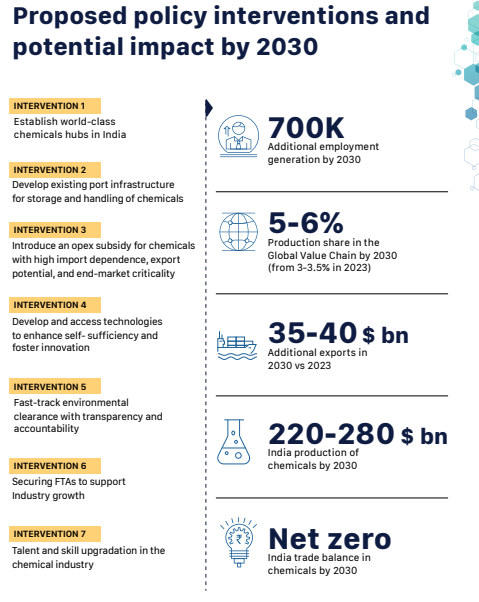
- 05 Jul 2025
In News:
NITI Aayog has released a comprehensive report envisioning India’s transformation into a global chemical manufacturing hub with a projected 12% share in global value chains (GVCs) and USD 1 trillion in output by 2040.
Current Landscape of India’s Chemical Industry
- Significant Economic Contributor: India is the 6th largest chemical producer globally and 3rd in Asia, contributing over 7% to manufacturing GDP. Key linkages: Pharmaceuticals, textiles, agriculture, and construction.
- Fragmented Sector Structure: Dominated by MSMEs, the sector suffers from lack of integrated value chains and modern infrastructure. Example: Cluster-based growth is concentrated in Gujarat, Maharashtra, and Tamil Nadu.
- Low Global Integration: India’s 3.5% share in global chemical value chains reflects weak backward integration and poor export competitiveness. The trade deficit in 2023 was USD 31 billion.
- High Import Dependence: Heavy reliance on China and Gulf countries for feedstocks and specialty chemicals. Example: Over 60% of critical Active Pharmaceutical Ingredients (APIs) are sourced from China.
- Negligible R&D Investment: India invests only 0.7% of industry revenue in R&D, far below the global average of 2.3%, limiting innovation in green and specialty chemicals.
- Regulatory and Procedural Hurdles: Environmental clearance (EC) delays (up to 12–18 months) and procedural bottlenecks lead to cost and time overruns.
- Skilling Deficit:
A 30% shortage of skilled professionals in green chemistry, process safety, and nanotechnology. Example: ITIs and vocational programs lag behind industry requirements.
Emerging Opportunities
- Green Chemistry Revolution: Global shift toward sustainable chemicals presents new market opportunities.
- Geopolitical Realignment: Rising distrust of China globally enables India to emerge as an alternate supplier.
- FTA Leverage: India’s Free Trade Agreements (FTAs) with UAE, EU, and ASEAN can enhance tariff-free access to major markets.
- Make in India Ecosystem: Policy support through PLI schemes, Petroleum, Chemicals and Petrochemicals Investment Regions (PCPIRs), and chemical parks.
- Job Creation Potential: The sector could generate 7 lakh skilled jobs by 2030, particularly in petrochemicals, research, and logistics.
Persistent Challenges
- Feedstock Vulnerability: Over-dependence on crude oil and naphtha imports poses price and supply risks.
- Outdated Industrial Clusters: Legacy clusters lack modern safety systems, storage infrastructure, and waste treatment facilities.
- High Logistics Costs: Freight costs are 2–3 times higher than global averages, reducing export competitiveness.
- Regulatory Complexities: Absence of single-window clearances, frequent policy shifts, and inter-state inconsistencies deter investments.
- Weak Industry-Academia Linkages: Poor collaboration leads to low patent output and limited skill development.
NITI Aayog’s Recommendations
- Develop World-Class Chemical Hubs: Upgrade existing clusters and establish empowered committees. Suggested hubs: Paradeep, Dahej, Vizag. Introduce a dedicated Chemical Infrastructure Fund.
- Opex-Based Incentives: Offer operational subsidies linked to import substitution and export potential.
- Boost Technology Access & R&D:
- Establish an industry-academia interface under the Department of Science and Technology (DST).
- Enable technology transfer from global MNCs.
- Streamline Environmental Clearances:
- Simplify processes via DPIIT audit mechanisms.
- Ensure greater transparency and faster approvals.
- Strengthen Skill Development:
- Expand and modernize ITIs and specialized institutes.
- Introduce tailored courses in polymer science, green chemistry, and process safety.
- Negotiate Chemical-Specific FTAs:
- Incorporate product-specific clauses.
- Simplify rules of origin and documentation processes.
Kolhapuri Chappals
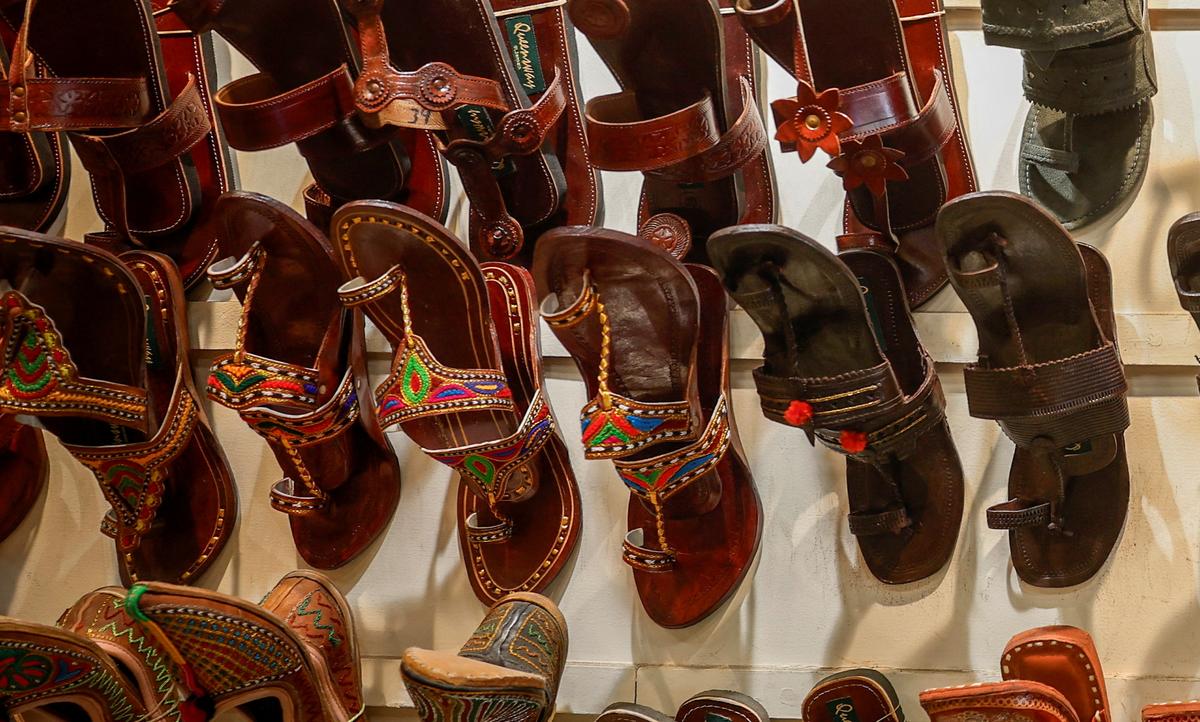
- 04 Jul 2025
In News:
Italian luxury fashion house Prada, after public criticism, has acknowledged that its Men’s Spring/Summer 2026 collection sandals were inspired by India’s traditional handcrafted footwear — the Kolhapuri chappals, a product with Geographical Indication (GI) status.
About Kolhapuri Chappals
Origin:
- Named after Kolhapur city in Maharashtra, India
- Handcrafted tradition dates back to the 13th century
Design & Craftsmanship:
- Made from 100% leather (cow, buffalo, or goat)
- Vegetable-tanned using natural dyes – non-toxic and eco-friendly
- Typicallyopen-toed with a T-strap design
- Traditionally in tan and brown shades with oil, natural, or polish finishes
- Time-intensive craftsmanship – can take up to six weeks per pair
Cultural & Economic Value:
- Recognised under the Geographical Indications (GI) Act of India
- Symbol of sustainable fashion, durability, and local artisanal skill
- Leather molds to feet over time, ensuring custom comfort and longevity
The Controversy: Cultural Appropriation vs Cultural Inspiration
- Criticism emerged after Prada launched sandals resembling Kolhapuris without credit
- Public and media backlash led to acknowledgement of Indian inspiration
- Highlights the importance of:
- Ethical recognition of traditional knowledge and cultural heritage
- Protection of GI-tagged products from unauthorized imitation
- Global awareness of India’s artisanal heritage
Financial Stability Report – June 2025
- 04 Jul 2025
In News:
The Reserve Bank of India (RBI) recently released the Financial Stability Report for June 2025.
What is the Financial Stability Report (FSR)?
- The Financial Stability Report (FSR) is a biannual publication by the Reserve Bank of India (RBI).
- It presents the collective assessment of the Sub-Committee of the Financial Stability and Development Council (FSDC-SC) regarding:
- Resilience of the Indian financial system
- Emerging systemic risks
- Outlook for macro-financial stability
Key Highlights – FSR June 2025
Macroeconomic & Global Outlook
- India remains a key driver of global growth, supported by strong macroeconomic fundamentals and prudent policies.
- Risks to growth include:
- Prolonged geopolitical tensions
- Trade and supply chain disruptions
- Weather-related uncertainties impacting agricultural output
Banking Sector Performance
- Gross Non-Performing Asset (GNPA) ratio:
- Stands at 2.3% as of March 2025, a multi-decadal low
- May rise modestly to 2.5% in baseline and 2.6% under adverse conditions by March 2027 (based on stress tests on 46 banks covering 98% of SCB assets)
- Capital Adequacy Ratios (CAR):
- Remain well above regulatory thresholds across the sector
- Even under severe stress scenarios, banks maintain adequate buffers — indicating robust financial health
Non-Banking Financial Companies (NBFCs)
- NBFCs are in good financial health with:
- Strong capital buffers
- Robust earnings
- Improving asset quality
- Continued financial resilience contributes to the overall stability of the financial system
Domestic Demand and Inflation Outlook
- Growth remains domestically driven
- Food inflation outlook favorable:
- Price moderation observed
- Crop output at record levels, supporting price stability
Significance for Financial Policy
- The report signals that India’s financial institutions are resilient and well-equipped to absorb economic shocks
- RBI's stress-testing framework confirms systemic soundness
- Reinforces India's investor confidence, especially in volatile global conditions
Research Development and Innovation (RDI) Scheme
- 04 Jul 2025
In News:
The Union Cabinet, chaired by the Prime Minister, has approved the Research Development and Innovation (RDI) Scheme with a corpus of ?1 lakh crore to strengthen India’s innovation ecosystem and boostprivate sector R&D investments.
Objective of the RDI Scheme
The scheme is designed to:
- Provide long-term financing or refinancing at low or nil interest rates
- Stimulate private sector investment in R&D and innovation
- Overcome existing funding challenges for private research
- Support sunrise and strategic sectors to drive:
- Innovation
- Technology adoption
- National competitiveness
- Economic security and self-reliance
Key Aims
- Encourage private sector participation in high-TRL (Technology Readiness Level) R&D projects
- Fund transformative innovation in sunrise domains
- Enable acquisition of critical and strategic technologies
- Facilitate the establishment of a Deep-Tech Fund of Funds (FoF)
Funding Structure
The RDI Scheme will operate on a two-tiered funding mechanism:
First Tier: Special Purpose Fund (SPF) under ANRF
- Housed within the Anusandhan National Research Foundation (ANRF)
- Acts as the primary custodian of funds
Second Tier: Fund Allocation & Disbursal
- SPF will allocate funds to multiple 2nd-level fund managers
- Mode of financing:
- Long-term concessional loans (low or nil interest)
- Equity financing, particularly for startups
- Contributions to Deep-Tech Fund of Funds (FoF) or other RDI-focused FoFs
Governance & Implementation
- Governing Board of ANRF (chaired by the Prime Minister): Provides strategic direction
- Executive Council (EC) of ANRF:
- Approves scheme guidelines
- Recommends fund managers
- Determines project types and sectors
- Empowered Group of Secretaries (EGoS):
- Led by the Cabinet Secretary
- Approves scheme changes, sectors, fund managers
- Monitors performance of the scheme
- Nodal Department:Department of Science and Technology (DST) is the nodal ministry for implementation.
Employment Linked Incentive (ELI) Scheme
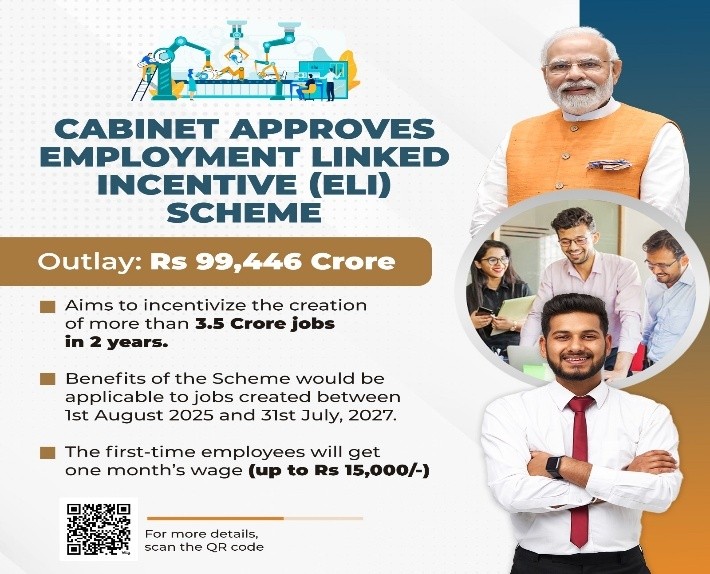
- 04 Jul 2025
In News:
The Employment Linked Incentive (ELI) Scheme is a flagship initiative of the Government of India aimed at formal job creation, especially for youth and in the manufacturing sector. It was announced in the Union Budget 2024–25 and came into implementation following cabinet approval.
Recent Update (July 2025 Cabinet Decision)
- EPFO registrationand Aadhaar seeding deadline:30 June 2025
- Job coverage period:1 August 2025 – 31 July 2027
Objectives
- Promote formal employment by incentivising employers
- Encourage first-time EPFO registration for workers
- Target high employment-generating sectors like manufacturing
- Provide direct income support and EPFO reimbursement subsidies
Key Components – 3 Schemes under ELI
|
Scheme |
Focus |
Key Beneficiaries |
Duration |
Central Outlay |
Estimated Beneficiaries |
|
Scheme A |
First-time employment |
New EPFO-enrolled youth |
3 years |
?23,000 crore |
210 lakh |
|
Scheme B |
Job creation in manufacturing |
Employers hiring ≥50 non-EPFO workers |
6 years |
?52,000 crore |
30 lakh |
|
Scheme C |
Support to employers |
All employers creating net new jobs |
6 years |
?32,000 crore |
50 lakh |
Detailed Scheme Benefits & Conditions
Scheme A: First-Time Employment
- Direct cash benefit: ?15,000 (?7,500 x 2 instalments)
- 1st installment: After 6 months of continuous EPFO-linked employment
- 2nd installment: After 12 months + completion of financial literacy course
- Condition: Exit before 12 months = employer must refund benefit
Scheme B: Job Creation in Manufacturing
- Eligibility: Employer must have 3-year EPFO record; hire ≥50 non-EPFO or 25% baseline
- Salary cap for subsidy: ?25,000/month (overall salary ≤ ?1 lakh)
- Incentive structure:
- Year 1: 24% of salary (employee + employer EPFO contribution)
- Year 2: 24%
- Year 3: 16%
- Year 4: 8%
- Refund clause: If employee leaves before 12 months
Scheme C: Support to Employers
- Eligibility:
- Employers with <50 workers: Hire ≥2 net new
- ≥50 workers: Hire ≥5 net new
- Subsidy per employee/month:
- ?1,000 (salary ≤ ?10,000)
- ?2,000 (?10,001–?20,000)
- ?3,000 (?20,001–?1 lakh)
- Duration: 2 years, extendable to 4 years for large job creators
Eligibility Criteria
- Employees:
- Salary < ?1 lakh/month
- Must be EPFO-registered with Aadhaar–UAN–bank linkage
- Employers:
- Must create net new jobs over EPFO baseline
- For Scheme B: 3-year EPFO record required
Application Process (Current Status)
- No dedicated ELI portal yet
- Via EPFO portal:
- UAN activation and Aadhaar seeding
- Employer-led EPFO registration
- Completion of Financial Literacy Course (for Scheme A)
Significance
- Reduces informal employment
- Supports youth entering formal jobs for the first time
- Incentivises hiring in labour-intensivemanufacturing
- Promotes EPFO inclusion and financial literacy
Challenges
- Compliance burden on small enterprises
- Ensuring retention to avoid refund liabilities
- Monitoring duplication between schemes
- Delay in scheme-specific digital portal rollout
E-Voting System

- 04 Jul 2025
In News:
For the first time in India, e-voting through a mobile app was used in the Bihar municipal elections (June 28, 2025) for six municipal councils in Patna, Rohtas, and East Champaran districts.
About the E-Voting System
- App Used:E-SECBHR, developed by Centre for Development of Advanced Computing (C-DAC)
- Target Groups:
- Senior citizens
- Persons with disabilities
- Pregnant women
- Others unable to reach polling booths
How It Works
- Installation: App available for Android users.
- Registration: Voter must link mobile number as per the electoral roll.
- Verification: Through voter ID number and facial recognition.
- Voting: Vote via app or Bihar Election Commission’s website on polling day.
Security Measures to Ensure Fairness
- Limited Logins: One mobile number can be used by only two registered voters.
- Facial Recognition: Used to verify identity during login and voting.
- Blockchain Technology:
- Ensures immutability of vote data.
- Prevents tampering or alteration of records.
National Turmeric Board Inaugurated in Telangana
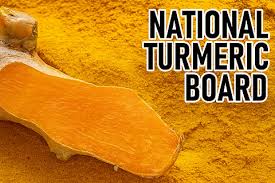
- 03 Jul 2025
In News:
The Union Home Minister inaugurated the headquarters of the National Turmeric Board in Nizamabad, Telangana, addressing a long-standing 40-year demand of turmeric farmers in the region.
About the National Turmeric Board (NTB):
- Established by: Government of India
- Status: Statutory body
- Location:Headquartered in Nizamabad, Telangana – popularly known as the "Turmeric Capital of India"
Administrative Oversight:
- Functions under the Ministry of Commerce and Industry
- Operates in coordination with the Ministries of AYUSH, Agriculture, Pharmaceuticals, and Cooperation
Governing Composition:
- Chairperson appointed by the Central Government
- Secretary from the Department of Commerce
- Members from:
- Relevant central ministries
- Turmeric-producing states (e.g., Telangana, Maharashtra, Meghalaya)
- Farmer groups, exporters, and research institutions
Objectives of the Board:
- Promote value addition, branding, and marketing of turmeric products
- Ensure better prices to farmers by reducing intermediaries
- Promote global recognition of turmeric’s medicinal value
- Upgrade logistics and quality infrastructure to meet global standards
- Support training, research, and skill development in turmeric cultivation and utilization
Key Functions:
- Develop an end-to-end export ecosystem for turmeric
- Promote GI-tagged organic turmeric in international markets
- Ensure compliance with global food and safety standards
- Coordinate with the Spices Board, National Cooperative Exports Ltd., and other cooperatives for export promotion
Turmeric in India: An Overview
Botanical Information:
- Scientific Name:Curcuma longa
- A rhizomatous herbaceous plant, valued for its use in cooking, dyeing, and traditional medicine
- Commonly known as the "Golden Spice"
Agro-Climatic Conditions:
- Grown in tropical climates, requires 20–30°C temperature and high rainfall
- Prefers well-drained loamy soils
- Cultivated under both rain-fed and irrigated conditions
Production and Exports (2022–23):
- Area under cultivation: 3.24 lakh hectares
- Total production: 11.61 lakh tonnes
- India's global share: Over 75% of world turmeric production
- Varietal diversity: Over 30 indigenous varieties cultivated
- Exports: 1.53 lakh tonnes valued at USD 207.45 million
- Target: USD 1 billion in turmeric exports by 2030
- Top export destinations:Bangladesh, UAE, USA, Malaysia
CRISPR-Based Gene Switch for Climate-Resilient Agriculture
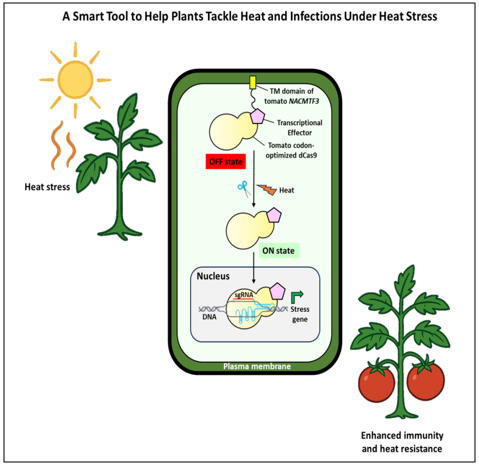
- 03 Jul 2025
In News:
Scientists at the Bose Institute, Kolkata, under the Department of Science and Technology (DST), have developed a modified CRISPR-based molecular tool to enhance plant resilience against heat stress and bacterial infections. The research is published in the International Journal of Biological Macromolecules.
What is the Innovation?
- The tool is a modified version of the CRISPR system called dCas9 (dead Cas9), which does not cut DNA.
- Instead, it functions as a stress-responsive gene switch, turning defense and heat-tolerance genes on or off only when the plant is under stress (e.g., high temperature or pathogen attack).
How Does It Work?
- The switch is held outside the plant cell’s nucleus using a tomato-derived protein domain (NACMTF3 TM domain).
- Under stress conditions, such as heat waves or bacterial infection, the tether is released.
- The dCas9 switch then enters the nucleus, activating genes that help the plant combat the stress.
Key Functional Genes Activated:
|
Gene |
Function |
|
CBP60g, SARD1 |
Activate immune response to bacterial infection (e.g., Pseudomonas syringae) |
|
NAC2, HSFA6b |
Enhance heat tolerance, retain water, and improve overall health |
Salient Features of the Tool:
- Non-invasive: Unlike traditional CRISPR, this version does not edit the DNA, making it safer and more acceptable.
- Energy-efficient: The switch is activated only when needed, minimizing unnecessary energy use by the plant.
- Dual Protection: Shields plants from both heat stress and pathogenic infections.
- Eco-friendly and crop-compatible: Based on naturally occurring proteins, tested successfully in tomato, potato, and tobacco.
Significance and Impact:
- Climate-Resilient Agriculture: Helps plants survive in rising temperatures and unpredictable weather.
- Food Security: Boosts productivity in solanaceous crops like tomato, potato, brinjal, and chilli.
- Smart Farming Solution: Offers a model for sustainable and precision agriculture globally.
- Global Applicability: Can be adapted to other food crops affected by climate change and disease outbreaks.
Hong Kong International Convention (HKC)
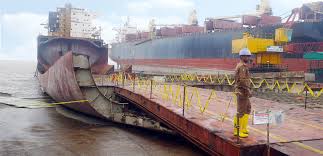
- 03 Jul 2025
In News:
The Hong Kong International Convention (HKC) for the safe and environmentally sound recycling of ships officially came into force on June 26, 2025.
About HKC:
- The HKC is a global treaty adopted under the aegis of the International Maritime Organization (IMO) to regulate the safe and environmentally sustainable recycling of ships that have reached the end of their operational life.
Objectives:
- Protect human health, especially that of shipbreaking workers.
- Prevent environmental pollution during ship dismantling.
- Control and manage hazardous materials such as asbestos, heavy metals, and hydrocarbons.
- Ensure safe waste handling and disposal practices in recycling yards.
Key Provisions:
- Inventory of Hazardous Materials (IHM):Ships must maintain an IHM listing all hazardous substances on board.
- Ship Recycling Plan (SRP):A certified SRP must be approved before the ship is sent for dismantling.
- Recycling Completion Certificate:Recycling facilities must issue this certificate within 14 days of dismantling completion.
- Third-Party Audits and Certification:Classification societies recognized by the IMO will conduct compliance audits and issue relevant certifications.
- Authorized Recycling Yards:The convention promotes the use of regulated and approved facilities for ship recycling to ensure compliance with international safety and environmental norms.
Significance:
- Strengthens global maritime safety and sustainable shipbreaking practices.
- Encourages modernization and regulation of recycling yards, especially in developing countries like India and Bangladesh.
- Aligns ship recycling with UN Sustainable Development Goals (SDGs), particularly those on health, environment, and decent work.
Operation Deep Manifest
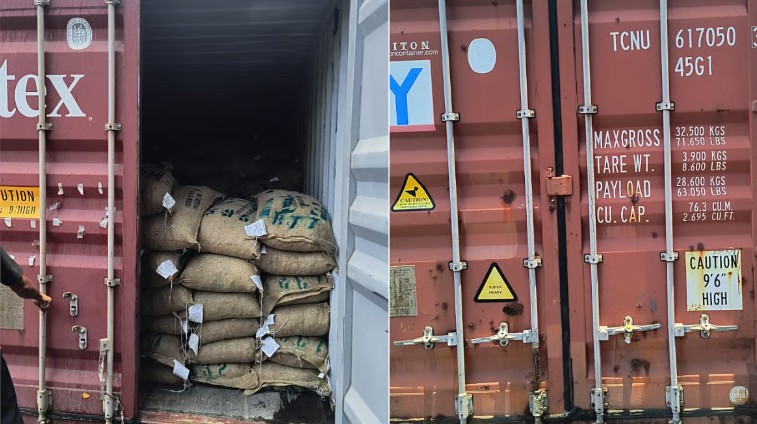
- 03 Jul 2025
In News:
The Directorate of Revenue Intelligence (DRI), under the Central Board of Indirect Taxes and Customs (CBIC), Ministry of Finance, launched “Operation Deep Manifest”, resulting in the seizure of Pakistani-origin goods worth ?9 crore.
Key Highlights:
- Seizure Details:39 containers carrying 1,115 metric tonnes of goods—primarily dry dates—were intercepted at Nhava Sheva Port. These goods were falsely declared as originating from the UAE.
- Route Manipulation:The consignments were illicitly routed via Dubai’s Jebel Ali Port after being shipped from Karachi, Pakistan, to obscure their true origin. Shipping documents were falsified and containers were switched during transshipment to evade detection.
- Violation of Policy:This seizure comes after India’s comprehensive ban on Pakistani-origin goods, which took effect on May 2, 2025, following the Pahalgam terror attacks. This replaced the earlier 200% customs duty imposed post-Pulwama (2019) and represents a zero-tolerance economic policy toward Pakistan.
- Financial and Security Links:Investigations uncovered financial linkages with Pakistani and UAE-based entities, pointing to an organized smuggling network with possible illicit financial flows and national security implications.
- Enforcement Action:A partner from one of the importing firms was arrested on June 26, and further criminal and financial investigations are ongoing.
Significance:
- National Security:Helps prevent economic infiltration from hostile states and curbs funding channels that could support anti-national activities.
- Trade Compliance:Acts as a deterrent against third-country transshipment—a common method to bypass sanctions or import bans.
- Tech-Driven Enforcement:Utilized document forensics, data analytics, and container surveillance to detect misdeclarations and track suspect cargo routes.
- Reinforces Policy Posture:Strengthens India's position of economic disengagement with Pakistan in response to cross-border terrorism.
Cell Broadcast System

- 03 Jul 2025
In News:
The Department of Telecommunications (DoT), in collaboration with the National Disaster Management Authority (NDMA), is piloting a Cell Broadcast (CB) system to enhance emergency communication and deliver real-time disaster alerts across India.
What is the Cell Broadcast System?
Cell Broadcasting is a telecommunication technology that enables mobile network operators to send geographically targeted text alerts to all mobile devices in a specific area. Unlike traditional SMS, CB messages are broadcast simultaneously to all phones within a cell tower’s coverage, ensuring instant delivery even during network congestion.
Key Features and Benefits:
- Instantaneous alerts during emergencies like earthquakes, tsunamis, lightning strikes, and industrial disasters.
- Indigenously developed by the Centre for Development of Telematics (C-DOT).
- Language inclusivity: Messages can be broadcast in multiple Indian languages.
- Particularly effective in high-density areas and during network overloads.
Integration with Existing Systems:
This CB system complements the existing Integrated Alert System (SACHET), which:
- Has delivered over 6,899 crore SMS alerts.
- Covers all 36 States and Union Territories.
- Supports 19 Indian languages.
- Is based on the Common Alerting Protocol (CAP) as recommended by the International Telecommunication Union (ITU).
Once fully deployed, the Cell Broadcast system will strengthen India’s disaster preparedness, ensuring wider, faster, and more inclusive dissemination of critical alerts.
Magnetic Resonance-guided Focused Ultrasound (MRgFUS) technology
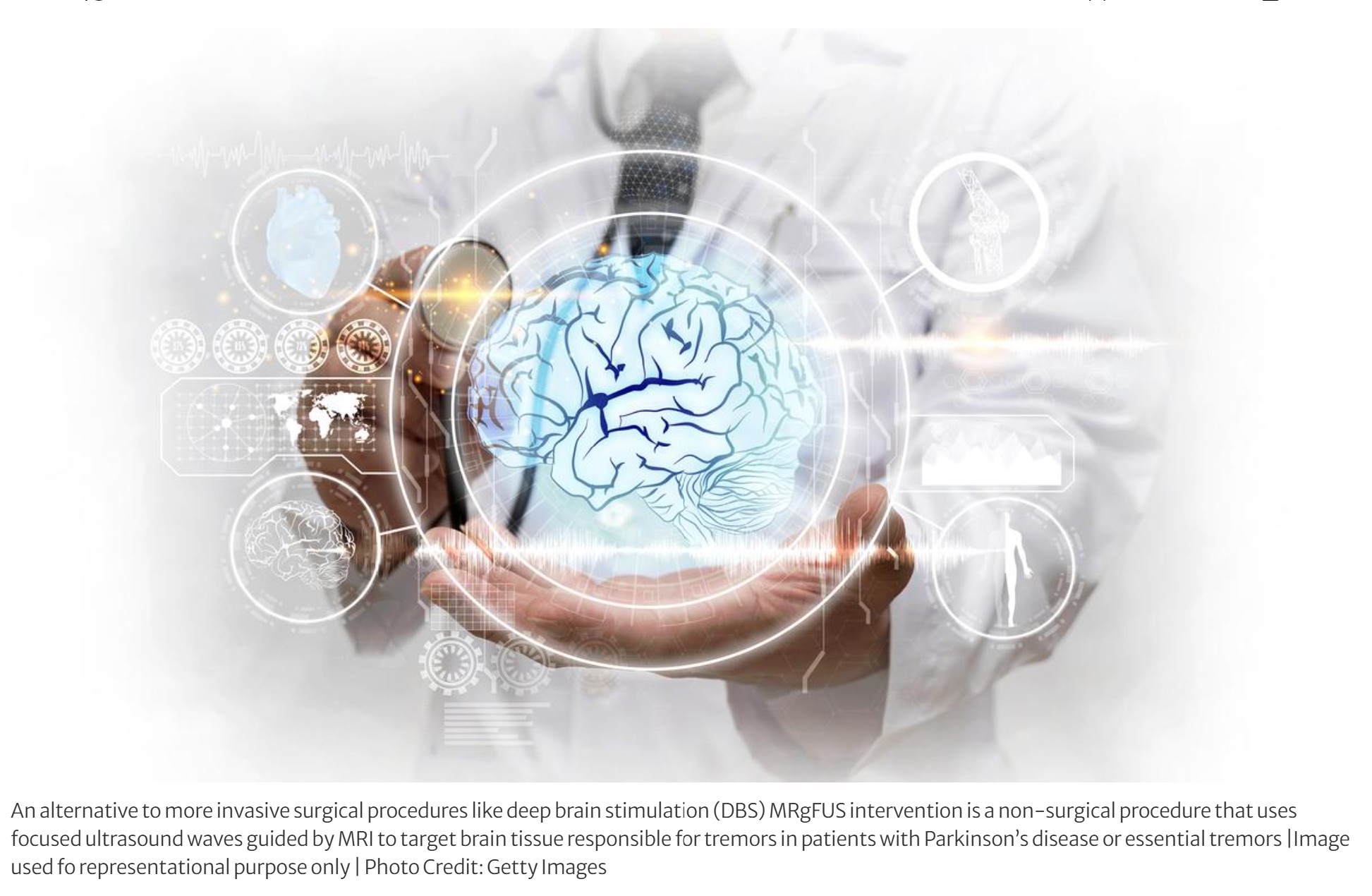
- 02 Jul 2025
In News:
India has recently introduced Magnetic Resonance-guided Focused Ultrasound (MRgFUS) technology, marking a significant advancement in non-invasive neurological treatment. This technique is now being offered in select hospitals, providing new hope for patients suffering from Essential Tremor (ET) and Tremor-Dominant Parkinson’s Disease (TD-PD) — two common but debilitating neurological disorders.
What is MRgFUS?
MRgFUS is a non-surgical, incisionless medical intervention that uses high-intensity focused ultrasound energy, guided by real-time MRI, to target and ablate precise regions of brain tissue responsible for tremors, especially in the thalamus, a key brain relay centre.
Unlike traditional procedures like Deep Brain Stimulation (DBS) that require surgery and implants, MRgFUS is performed without any cuts or anaesthesia and allows immediate symptom relief with minimal recovery time.
Key Features of MRgFUS
- Incisionless procedure: No need for surgical opening of the skull
- MRI-guided precision: Real-time monitoring and adjustment
- Rapid recovery: Hospital stay of 1–2 days
- No implants or batteries: One-time treatment
- Immediate results: Visible tremor relief during the procedure itself
Medical Significance
Essential Tremor (ET):
- Affects ~1% of global population
- Incidence increases with age: ~5% of people over 60
- Not life-threatening but impairs daily life — eating, writing, speaking
- Leads to social isolation, anxiety, and functional disability
MRgFUS offers a safe, effective, and non-invasive solution for patients who are unwilling or unfit for brain surgery.
Availability in India
MRgFUS has been introduced in several advanced medical centres:
- Sir Ganga Ram Hospital, Delhi – First private hospital in North India to offer the procedure
- AIIMS, Delhi – First government institution to adopt it
- Royal Care Super Speciality Hospital, Coimbatore – Pioneer centre in India
- KIMS Hospitals, Telangana
As of mid-2025, over 200 patients in India have undergone the procedure successfully, with more than 25,000 globally.
Cost and Duration
- Procedure Cost: ?19–23 lakh
- Duration: 1–3 hours
- Performed by: A multidisciplinary team of neurologists, neurosurgeons, and neuroradiologists
Global Context and Technological Backing
- Insightec, a global leader in MRgFUS technology, is facilitating its expansion in India.
- The company is also exploring new clinical applications for the same technology in other neurological disorders beyond ET and Parkinson’s.
India Energy Stack (IES)
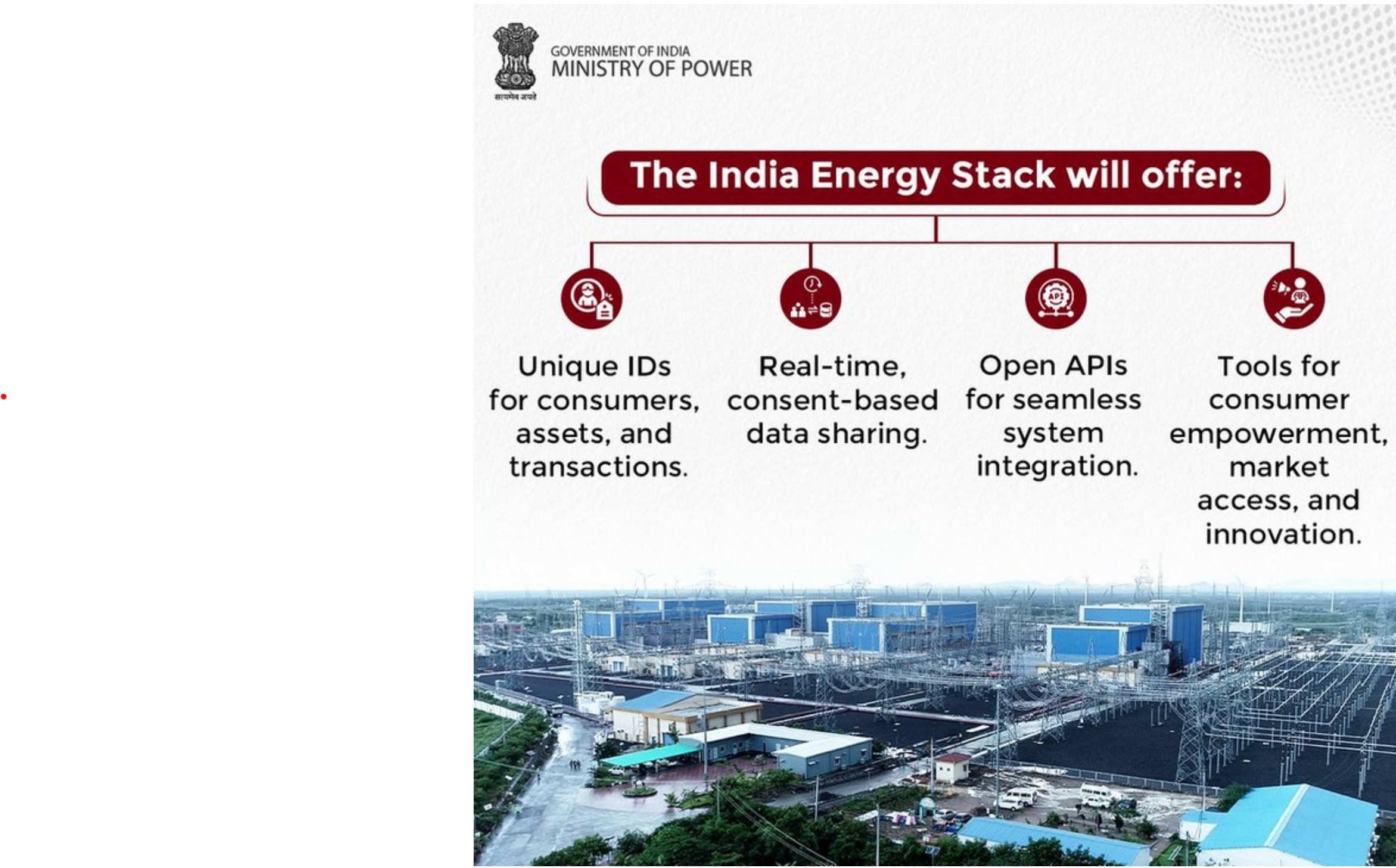
- 02 Jul 2025
In News:
In a transformative move aimed at digitising India’s power sector, the Ministry of Power has announced the conception of the India Energy Stack (IES) — a Digital Public Infrastructure (DPI) initiative designed to build a unified, secure, and interoperable digital ecosystem across the energy value chain.
This effort aligns with India’s goals of achieving a $5 trillion economy and meeting its Net Zero commitments, while addressing the growing complexities of a rapidly evolving energy landscape marked by renewables, electric vehicles, and consumer-centric markets.
What is India Energy Stack (IES)?
The India Energy Stack is envisioned as a standardised, open, and secure digital infrastructure to:
- Streamline operations in the power sector
- Empower consumers with access to real-time, consent-based data
- Integrate renewable energy into the national grid
- Enhance the efficiency of Distribution Companies (DISCOMs)
The initiative is spearheaded by the Ministry of Power, drawing inspiration from successful DPI models like Aadhaar (identity) and UPI (digital payments).
Core Features of IES
- Unique IDs: Assigned to consumers, assets, and energy transactions
- Real-time Data Sharing: Consent-based access for secure and accountable data exchange
- Open APIs: Enabling seamless integration across utility systems and third-party applications
- Consumer Empowerment Tools: Market access platforms, billing transparency, demand response options, and innovation support
- Interoperability: Standardised protocols for all stakeholders in the electricity ecosystem
Implementation Strategy
1. Proof of Concept (PoC) – 12 Months
A year-long pilot phase will test the India Energy Stack using real-world scenarios in partnership with selected utilities and DISCOMs.
2. Utility Intelligence Platform (UIP)
The UIP is a modular, analytics-driven application built on the India Energy Stack. It aims to:
- Provide real-time insights to utilities, policymakers, and regulators
- Enable smart energy management
- Enhance decision-making for grid operations and consumer services
3. Pilot Regions
The PoC will be conducted in collaboration with DISCOMs in:
- Mumbai
- Gujarat
- Delhi
Institutional Framework
- A dedicated Task Force has been established by the Ministry of Power.
- It includes experts from:
- Technology domain
- Power sector operations
- Regulatory bodies
- The Task Force will guide:
- System architecture design
- Pilot implementation
- National scale-up strategy
Expected Outcomes
- India Energy Stack White Paper for public consultation
- UIP deployment in pilot cities
- National roadmap for phased rollout of IES across all states and UTs
- Improved grid stability, energy access, and transparency in service delivery
- Enhanced integration of renewable energy sources into the mainstream grid
Significance for India’s Power Sector
The India Energy Stack has the potential to be a game-changer for the power sector, enabling:
- Modernisation of legacy systems
- Digital empowerment of consumers
- Efficient energy trading and billing
- Decentralised and democratised power governance
As India undergoes its green energy transition, IES will serve as the digital spine supporting clean, accountable, and consumer-centric power distribution.
At Sea Observer Mission

- 02 Jul 2025
In News:
In a major milestone for regional security, the QUAD nations — India, Japan, the United States, and Australia — have launched their first-ever 'At Sea Observer Mission'. This cross-embarkation initiative, conducted under the Wilmington Declaration, seeks to deepen maritime interoperability, operational coordination, and domain awareness in the Indo-Pacific region.
This move signifies the QUAD’s growing shift from diplomatic coordination to practical maritime collaboration, in line with the vision outlined at the QUAD Leaders’ Summit in September 2024.
Key Features of the At Sea Observer Mission
- Participating Nations: India, Japan, USA, and Australia — the four QUAD countries.
- Agencies Involved:
- Indian Coast Guard (ICG)
- Japan Coast Guard (JCG)
- United States Coast Guard (USCG)
- Australian Border Force (ABF)
- Vessel Involved:USCGC Stratton (US Coast Guard Cutter) currently en route to Guam.
- Observer Teams: Two officers from each country, including women officers, embarked for the mission.
- Format:Cross-embarkation, where officers from different countries are hosted on board a partner nation's ship to enable firsthand operational learning.
Objectives and Strategic Relevance
- Strengthening Maritime Security
- Promotes collective surveillance, intelligence sharing, and maritime law enforcement.
- Enhances preparedness against common threats such as illegal fishing, piracy, smuggling, and disaster response.
- Boosting Interoperability and Coordination
- Lays groundwork for real-time joint operations and coordinated patrols.
- Encourages standardization of practices and communication protocols across QUAD navies and coast guards.
- Upholding the Rules-Based Order: Reinforces commitment to a Free, Open, Inclusive, and Rules-Based Indo-Pacific, countering unilateral actions and grey-zone threats in the region.
Indian Perspective: SAGAR and IPOI
India’s participation in the mission reflects its broader strategic vision of SAGAR (Security and Growth for All in the Region). It also aligns with India’s leadership in the Indo-Pacific Oceans Initiative (IPOI), particularly in the pillars of:
- Maritime Security
- Capacity Building and Resource Sharing
- Disaster Risk Reduction and Management
- Maritime Ecology and Maritime Resources
India's active role demonstrates its commitment to multilateral maritime cooperation, gender inclusivity, and regional stability.
Long-Term Implications: Toward a 'QUAD Coast Guard Handshake'
The ‘At Sea Observer Mission’ represents a foundation for the future institutionalisation of QUAD maritime security cooperation, informally dubbed the ‘QUAD Coast Guard Handshake.’ This aims to:
- Foster trust and operational familiarity
- Improve collective resilience against emerging maritime challenges
- Create a responsive, inclusive, and rule-abiding Indo-Pacific maritime domain
Space-Based Surveillance-III Programme

- 02 Jul 2025
In News:
Building on critical lessons from Operation Sindoor, where satellite surveillance played a pivotal role in precision military responses, the Union Government has decided to fast-track the launch of 52 dedicated surveillance satellites. The move is aimed at enhancing real-time, all-weather, and round-the-clock monitoring of India’s land and maritime borders, particularly with China and Pakistan.
The decision comes amid growing emphasis on space-based intelligence, surveillance, and reconnaissance (ISR) capabilities to counter modern threats, including drones and hypersonic weapons.
SBS-III Programme: Overview
The Space-Based Surveillance-III (SBS-III) programme was approved in October 2023 by the Cabinet Committee on Security (CCS) chaired by the Prime Minister. It is India’s most ambitious defence space project to date.
Key Features of SBS-III:
- Total Satellites: 52 dedicated military satellites
- ISRO: Will build and launch 21 satellites
- Private Sector: Will develop 31 satellites
- Launch Timeline:
- First launch by April 2026
- Full constellation targeted by end of 2029
- Project Cost: ?26,968 crore (approx. $3.2 billion)
- Supervising Agency:Defence Space Agency (DSA) under the Integrated Defence Staff (IDS), Ministry of Defence
Strategic Objectives and Capabilities
- Surveillance Reach and Coverage
- Wider coverage of China, Pakistan, and Indian Ocean Region (IOR)
- Reduced revisit times: Faster and more frequent imaging of sensitive areas
- Capability to monitor airfields, military bases, and staging grounds deep inside adversary territory
- Operational Orbits
- Satellites to operate in both Low Earth Orbit (LEO) and Geostationary Orbit (GEO) for layered coverage
- Designed to counter China’s anti-satellite (ASAT) capabilities including kinetic and electronic warfare systems
Technology and Innovations
- Artificial Intelligence (AI) Integration
- Satellites will use AI-powered decision-making to enhance image processing, target detection, and threat identification
- Ability to interact with each other and form a Geo-Intelligence (GeoInt) network for real-time intelligence sharing
- Small Satellite Launch Vehicles (SSLV)
- ISRO to transfer SSLV technology to private players
- Enables rapid satellite deployment during emergencies, ensuring strategic agility and resilience
Lessons from Operation Sindoor
During Operation Sindoor, Indian defence forces used satellite-based surveillance to track drone and missile trajectories, providing precise actionable intelligence. This success underscored the need for:
- High-resolution radar imaging
- Day-night and all-weather capabilities
- Faster intelligence turnaround time
These operational insights directly influenced the SBS-III mission design and its urgency.
Defence Space Agency (DSA)
- Established in 2019, replacing the Integrated Space Cell
- Operates under the Ministry of Defence’s Integrated Defence Staff (IDS)
- Coordinates with ISRO, DRDO, and Armed Forces on:
- Space warfare strategy
- Protection of Indian space assets
- Integration of ISR data with battlefield operations
Eight Years of GST
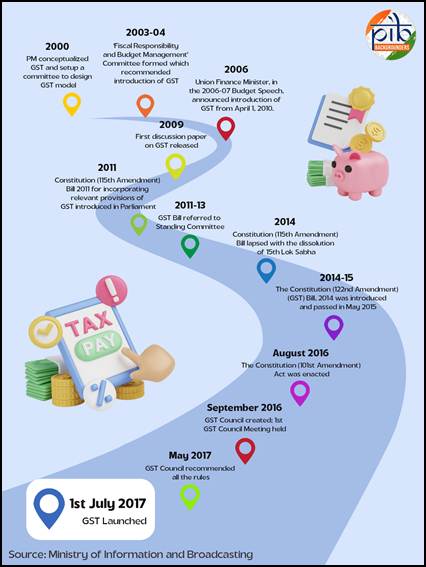
- 02 Jul 2025
In News:
The Goods and Services Tax (GST) was implemented on 1st July 2017, aiming to unify India’s fragmented indirect tax system into a single, nation-wide tax. It replaced multiple central and state levies such as excise duty, service tax, VAT, and others.
By simplifying the tax structure and improving transparency, GST aimed to enhance compliance, remove tax cascading, and create a common national market. As of 1st July 2025, GST has completed eight years.
Key Highlights of 2024–25
- In the financial year 2024–25, GST collections reached an all-time high of ?22.08 lakh crore, representing a growth of 9.4% over the previous year. The average monthly collection was ?1.84 lakh crore. The number of active GST taxpayers crossed 1.51 crore.
- According to the Deloitte GST@8 survey, 85% of respondents across industries reported a positive experience with GST, highlighting improvements in compliance, transparency, and ease of doing business.
Structure of the GST System
Components of GST
GST operates under a dual model:
- Central GST (CGST) and State GST (SGST) for intra-state transactions.
- Integrated GST (IGST) for inter-state transactions and imports.
Rate Structure
The GST Council has approved a multi-tier rate structure:
- Standard slabs of 5%, 12%, 18%, and 28% apply to most goods and services.
- Special lower rates include 0.25% on rough diamonds, 1.5% on cut and polished diamonds, and 3% on gold, silver, and jewellery.
- A Compensation Cess is levied on select goods such as tobacco, aerated drinks, and luxury cars to compensate states for revenue loss during the transition.
Key Features of GST
- Destination-Based Tax: GST is levied at the place of consumption, rather than origin. This ensures equitable revenue distribution and smooth credit flow across the supply chain.
- Input Tax Credit (ITC): Businesses can claim credit for taxes paid on inputs. This eliminates the cascading effect of taxes and reduces overall costs.
- Threshold Exemption: Small businesses with turnover below ?40 lakh for goods and ?20 lakh for services are exempt from GST, reducing the compliance burden on micro-enterprises.
- Composition Scheme: Businesses with turnover up to ?1.5 crore (goods) and ?50 lakh (services) can opt for a simplified tax scheme with fixed rates and minimal paperwork.
- Digital Compliance: All processes—from registration to return filing and payments—are conducted online through the GSTN portal. This digital-first approach enhances transparency and efficiency.
- Sector-Specific Exemptions: Essential sectors such as healthcare and education are either exempt or taxed at concessional rates to ensure affordability.
- Revenue Sharing: GST enables seamless credit transfers and transparent revenue sharing between the Centre and States, strengthening cooperative fiscal federalism.
Impact of GST
On MSMEs
- GST has provided major relief to micro, small, and medium enterprises by raising exemption thresholds and simplifying compliance. The introduction of the composition scheme allows them to pay tax at a flat rate with simplified filing.
- The Trade Receivables Discounting System (TReDS) has also expanded access to credit. As of May 2024, four digital platforms were operational, with over 5,000 buyers and 53 banks and 13 NBFCs registered as financiers.
- Other initiatives include quarterly return filing for businesses with turnover up to ?5 crore and SMS-based NIL return filing, reducing administrative hassle for small taxpayers.
On Consumers
- GST has benefited consumers by lowering tax rates on essential goods such as cereals, edible oils, sugar, and snacks. A study by the Finance Ministry found that GST led to an average household saving of 4% in monthly expenses.
- The expansion of the tax base from 60 lakh registered taxpayers in 2017 to over 1.51 crore in 2025 has enabled the government to rationalize rates further.
On the Logistics Sector
- The removal of inter-state check posts and the introduction of e-way bills have significantly improved logistics efficiency. Transport time has reduced by over 33%, and businesses no longer need to maintain warehouses in every state. This has facilitated the creation of centralized, tech-enabled supply chains.
Revenue Performance Over Time
Since its launch, GST collections have shown consistent growth. In 2020–21, collections stood at ?11.37 lakh crore. They rose to ?14.83 lakh crore in 2021–22, ?18.08 lakh crore in 2022–23, ?20.18 lakh crore in 2023–24, and finally to ?22.08 lakh crore in 2024–25. This reflects improved compliance, economic recovery, and digital enforcement.
GST Council and Its Role
Constitutional Basis: The GST Council was constituted under Article 279A of the Constitution following the passage of the 122nd Constitutional Amendment Act. The Council was formally set up after Presidential assent on 8th September 2016.
Composition: The Council includes:
- Union Finance Minister as Chairperson
- Union Minister of State (Finance/Revenue)
- State Finance Ministers
- Special representation in case of constitutional emergency (Article 356)
Major Decisions: Since its inception, the GST Council has met 55 times and taken several reform-oriented decisions:
- Introduced e-way bills, e-invoicing, and the QRMP scheme
- Reduced GST on under-construction affordable housing from 8% to 1%
- Lowered GST on electric vehicles from 12% to 5%, and exempted large EV buses
- Streamlined compliance through auto-populated returns and QR codes
- Rationalized GST slabs, reducing items in the 28% slab from 227 to 35
- Set up GST Appellate Tribunals with Principal Bench in New Delhi
- Rolled out Aadhaar-based biometric authentication and clarified rules for vouchers
- Recommended full GST exemption on gene therapy and a legal framework for Invoice Management System
Skills for the Future
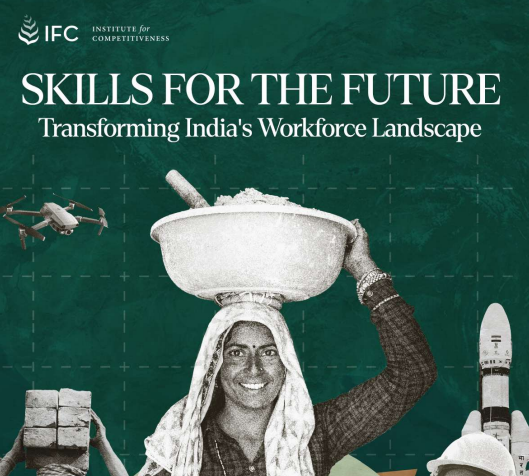
- 01 Jul 2025
In News:
Recently, theUnion Minister Jayant Chaudhary (MoS, Independent Charge – Ministry of Skill Development and Entrepreneurship, and MoS – Ministry of Education) unveiled the report "Skills for the Future: Transforming India’s Workforce Landscape", prepared by the Institute for Competitiveness (IFC). This data-driven report critically analyses India’s skilling ecosystem using PLFS 2023–24 and other datasets.
Significance of Skilling for India’s Development
- Demographic Dividend: India has one of the world’s youngest populations. Skilling is crucial to leverage this before population ageing sets in (by 2047).
- Economic Growth: A 1% rise in Gross Enrolment Ratio (GER) at the tertiary level increases GDP by 0.511% (Parika, 2020).
- Employment Creation: India needs to create 5 lakh non-farm jobs annually till 2030 (Economic Survey 2023–24).
- Global Competitiveness: Leadership in EVs, AI, biotechnology, and green energy demands a future-ready workforce.
Key Findings from the Report (PLFS 2023–24 Based)
1. Skill Distribution
- 88% of India’s workforce is in low-competency jobs (Skill Levels 1 & 2).
- Only 10–12% are employed in high-skill roles (Skill Levels 3 & 4).
- Only 4.5% of the workforce has received formal vocational training.
2. Education-Skill Mismatch
- Only 8.25% of graduates are in roles matching their skill level.
- Over 50% of graduates are employed in lower-skill jobs.
- Severe case of overqualification and underutilization of educational capital.
3. TVET and Sectoral Gaps
- Top 5 Sectors (66% of vocational enrolment):
- Electronics
- IT & ITeS
- Textiles & Apparel
- Healthcare & Life Sciences
- Beauty & Wellness
- Skill Deficits are critical in high-growth sectors like green tech, AI, biotech, and EVs.
4. Wage Inequality by Skill Level
Skill Level Avg. Annual Wage
Level 1 Rs.98,835
Level 2 Rs.1.26 lakh
Level 3 Rs.2.81 lakh
Level 4 Rs.3.94 lakh
46% of the workforce earns less than ?1 lakh/year, highlighting a major economic disparity.
5. Regional Disparities
- Low-Skilled States: Bihar, Assam (95% in Skill Levels 1 & 2)
- Higher-Skill States: Kerala, Chandigarh
- Migration and brain drain observed in low-skill, low-growth regions
Challenges Identified
- Skill-Education Mismatch: Graduates in low-skill jobs; vocational roles filled by underqualified informal workers.
- Weak TVET-Industry Linkage: Existing courses not aligned with Industry 4.0 or green economy needs.
- Low GER and Transition Dropout: Higher secondary GER at 57.56%, tertiary GER still below 30%.
- Gender & Social Exclusion: Low skilling access for women, SC/STs, rural youth.
- Data & Outcome Gaps: No central skill repository or real-time job-skill tracking.
Recommendations from the Report
- Institutional Reforms
- Launch a National Skill Gap Survey
- Establish a Central Skill Data Repository for real-time, evidence-based policymaking
- Curriculum & TVET Overhaul
- Update NCO codes (National Classification of Occupations)
- Integrate vocational training in schools
- Scale up PMKVY, NAPS, and credit-linked certifications
- Industry & Market Linkages
- Incentivise hiring of certified skilled labour
- Link industry wage structures to skill certifications
- Encourage industry-led training programs
- Targeted Inclusion & Regional Empowerment
- Empower State Skill Missions
- Prioritise high-potential regions and sectors
- Target women, SC/STs, informal sector workers
- Education Pipeline Strengthening
- Raise GER at higher secondary and tertiary levels
- Promote flexible, modular skilling programs for working populations and school dropouts
Digital Initiatives for Maritime Sector
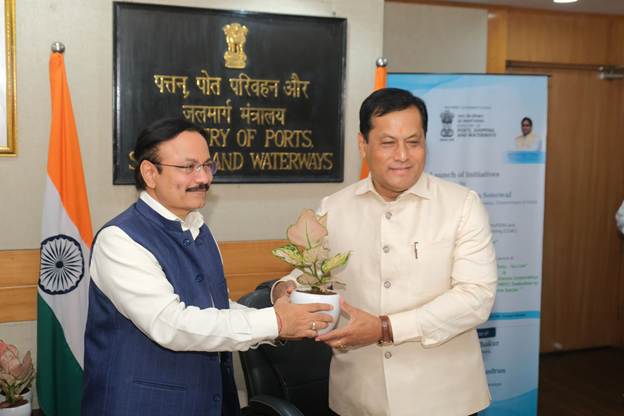
- 01 Jul 2025
In News:
Recently, the Union Minister for Ports, Shipping and Waterways, Shri Sarbananda Sonowal, launched a series of digital and sustainability-driven initiatives aimed at modernising India’s maritime sector. These reforms are aligned with the Maritime India Vision 2030 and Amrit Kaal Vision 2047.
Major Digital and Policy Initiatives Launched
1. Digital Centre of Excellence (DCoE)
- MoU signed between: MoPSW and Centre for Development of Advanced Computing (CDAC)
- Objective: Accelerate digital transformation across Indian ports
- Key Features:
- Application of AI, IoT, Blockchain to optimize maritime logistics
- Drive real-time operational upgrades
- Support green and sustainable port operations
- Strategic Alignment: Supports Atmanirbhar Bharat, Viksit Bharat @2047
2. SAGAR SETU Platform
- Type: Unified digital interface for maritime trade and EXIM operations
- Go-Live Date: 26th June 2025
- Integration: Connects 80+ ports and 40+ stakeholders
- Objective:
- Streamline cargo and vessel documentation
- Enable paperless, seamless, and transparent logistics
- Improve Ease of Doing Business (EoDB)
- Linked with: PM Gati Shakti National Master Plan
3. DRISHTI Framework
- Full Form: Data-driven Review Institutional System for Tracking Implementation
- Purpose: Real-time monitoring of projects under Maritime India Vision 2030
- Key Pillars:
- KPI Monitoring
- Progress & Achievements Tracking
- Organisational Oversight
- Functional Cell Coordination
- Strategic Value: Informed decision-making, faster project delivery
4. Standardised Scale of Rates (SOR) Template for Major Ports
- Objective: Standardise port tariffs to remove inconsistencies and improve transparency
- Features:
- Uniform structure for port tariffs
- Digitally comparable rates across ports
- Ports retain flexibility for local economic conditions
- Expected Impact:
- Enhances investor confidence
- Improves user experience
- Aligns with global maritime practices
Sustainability & Clean Energy: Hydrogen Transition Roadmap
Gateway to Green Report
Title: Gateway to Green — Assessing Port Readiness for Green Hydrogen Transition in India
- Released by: Ministry of Ports in collaboration with the Indian Ports Association (IPA)
- Objective: Transform Indian ports into green hydrogen hubs by 2030
- Strategic Goals:
- Produce 5 million tonnes of Green Hydrogen by 2030
- Develop infrastructure for production, storage, and export
- Leverage India’s maritime geography for clean energy leadership
- Targeted Ports for Hydrogen Transition:
- V.O. Chidambaranar Port
- Paradip Port
- Deendayal Port
- Jawaharlal Nehru Port
- Mumbai Port
- Cochin Port
- Key Action Areas:
- Land allocation for hydrogen projects
- Demand stimulation and investor facilitation
- International collaborations for knowledge and finance
- Shared infrastructure models
Strategic Relevance for India
- Economic Impact:
- Enhances trade competitiveness and reduces logistics cost
- Modernises infrastructure to global benchmarks
- Boosts Make in India and port-led development
- Digital Governance:
- Promotes data-driven decision-making
- Enables real-time monitoring and performance tracking
- Environmental Sustainability:
- Aligns with India’s National Hydrogen Mission
- Ports act as catalysts for clean energy transition
International Potato Research Center
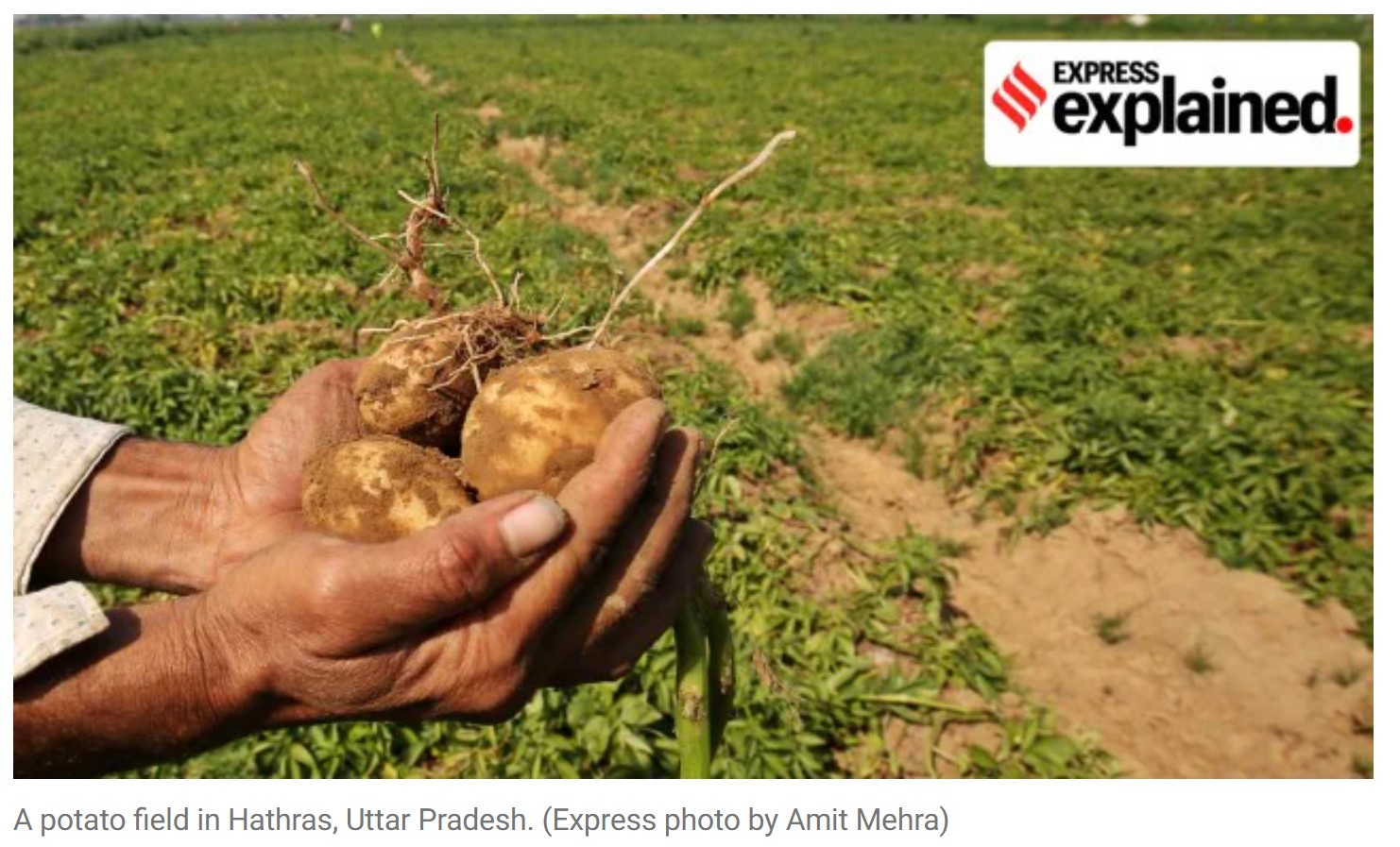
- 01 Jul 2025
In News:
- On June 25, 2025, the Union Cabinet approved the establishment of the CIP-South Asia Regional Center (CSARC) in Agra, Uttar Pradesh.
- The center will function as a regional wing of the International Potato Center (CIP) headquartered in Lima, Peru.
About CIP
- Founded: 1971
- Headquarters: Lima, Peru
- Focus Crops: Potato, Sweet Potato, and Andean roots & tubers
- Global Presence: South America, Africa, Asia
- India Operations: Since 1975, through partnership with ICAR
About CIP-South Asia Regional Center (CSARC)
- Location: Singna, Agra district, Uttar Pradesh
- Land Provided: 10 hectares (by UP Government)
- Total Project Cost: ?171 crore
- Indian Contribution: ?111.5 crore
- CIP Contribution: ?60 crore
- Implementing Ministry: Ministry of Agriculture & Farmers’ Welfare
Objectives of the Center
- Improve productivity of potato and sweet potato
- Promote climate-resilient, disease-free varieties
- Enhance post-harvest management and value addition
- Boost domestic seed production
- Support exports and food processing industries
- Increase farmer income, employment, and nutritional security
Why is this Significant?
- Potato is the 3rd most consumed crop globally (after rice and wheat)
- Sweet potato ranks 6th globally (after maize and cassava)
- India is the 2nd largest producer and consumer of potato
- Current average yield in India:
- Potato: ~25 tonnes/ha (Potential: >50 tonnes/ha)
- Sweet Potato: ~11.5 tonnes/ha (Potential: ~30 tonnes/ha)
- Establishment of CSARC will:
- Reduce dependency on seed imports
- Improve access to global germplasm
- Help bridge the yield gap
Global and National Context
- China is the largest potato producer (78.24 million tonnes, 2020)
- India is second (51.3 million tonnes, 2020)
- Top Potato-Producing States in India (2020–21):
- Uttar Pradesh (~15 million tonnes)
- West Bengal (~15 million tonnes)
- Bihar (~9 million tonnes)
Related Agricultural Research Institutions in India
- ICAR-CPRI, Shimla – Potato research
- ICAR-CTCRI, Thiruvananthapuram – Sweet potato and tuber crops
- IRRI-SARC, Varanasi – Regional center of International Rice Research Institute
CIP Centers Outside Peru
- China Center for Asia-Pacific (CCCAP) – Established in 2017 in Beijing, China
- India's CSARC (Agra) will be the second major CIP center outside Peru
Operation Bihali
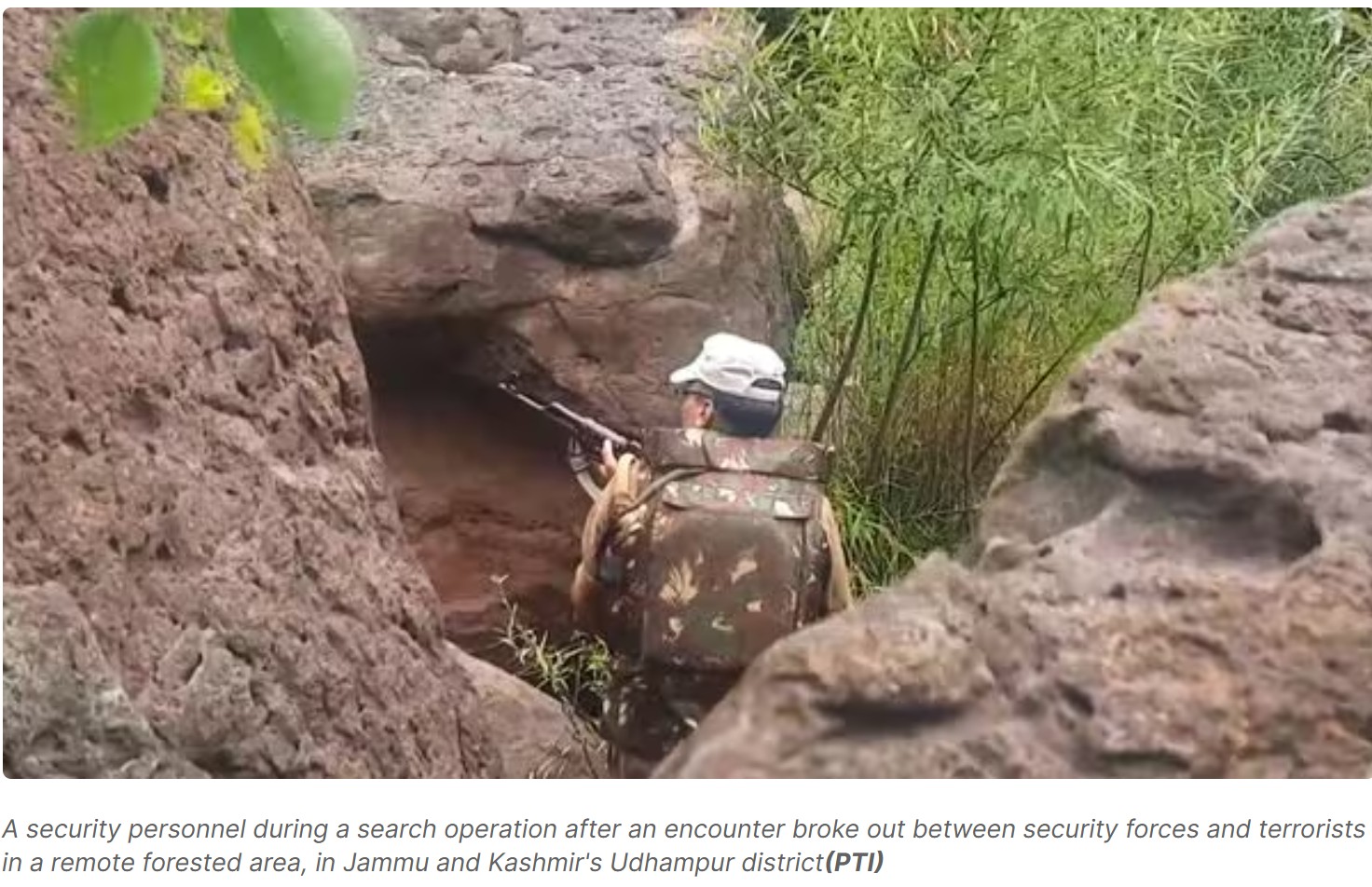
- 01 Jul 2025
In News:
A Jaish-e-Mohammad (JeM) terrorist was neutralized and three others were cornered in Operation Bihali, a high-risk counter-terror operation conducted in the Basantgarh area of Udhampur district, Jammu & Kashmir.
About Operation Bihali
Aspect Details
Type of Operation Counter-terrorism
Objective Neutralize a group of 4 JeM terrorists and prevent cross-border attacks
Location Basantgarh region, Udhampur district, J&K
Launched by Jointly by Indian Army Para Commandos and J&K Police
Operational Command Under the White Knight Corps
Intelligence Basis Based on 12 months of surveillance identifying the terrorist group
Key Significance
- Neutralization of JeM Threat: Thwarted potential attacks and ensured regional stability.
- Intelligence-Led Operation: Reflects enhanced surveillance and coordination between civil and military forces.
- Strategic Impact:
- Disrupted terror infiltration routes along sensitive zones.
- Reinforced India's proactive counter-insurgency posture in Jammu & Kashmir.
- Strengthened local security infrastructure in vulnerable border districts.
19th National Statistics Day
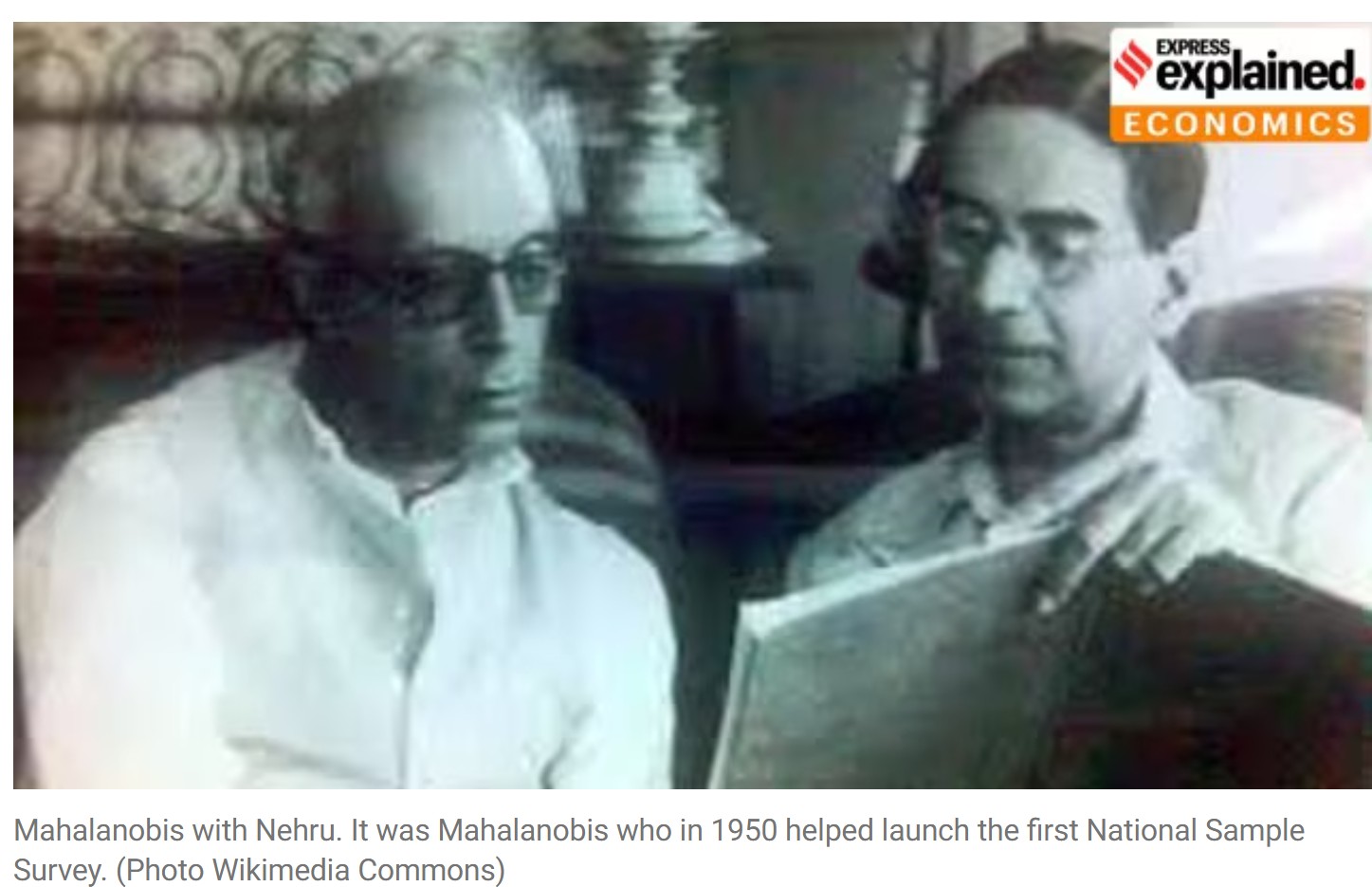
- 01 Jul 2025
In News:
MoSPI celebrates 19th Statistics Day honouring Prof. P.C. Mahalanobis and 75 years of National Sample Survey.
Key Highlights:
June 29 is observed as National Statistics Day in India to commemorate the birth anniversary of Prof. Prasanta Chandra Mahalanobis (1893–1972), widely regarded as the Father of Indian Statistics. The 2025 theme is "75 Years of National Sample Survey (NSS)".
The day is dedicated to promoting the role of statistics in nation-building and policy formulation, especially among the youth.
Key Contributions of P.C. Mahalanobis
1. Architect of India’s National Sample Survey (NSS)
- In 1950, Prof. Mahalanobis pioneered the National Sample Survey, India's first scientific and large-scale household data collection system.
- NSS is a large-scale, nationwide socio-economic data collection initiative conducted by the National Sample Survey Office (NSSO) under the Ministry of Statistics and Programme Implementation (MoSPI).
- Key Objectives of the NSS: Generate high-quality data to inform public policy, planning, and developmental programs.Conduct household surveys on:
- Consumption expenditure
- Employment & unemployment
- Health and education
- Migration and the informal sector
- Undertake the Annual Survey of Industries (ASI) to evaluate industrial performance.
- Support the agricultural sector by supervising crop area and yield estimation.
- Provide price statistics for rural and urban India to monitor inflation and cost-of-living changes.
- Key Features of the NSS
- All-India Scientific Coverage: Surveys conducted in both rural and urban areas using stratified multi-stage sampling methods.
- Organizational Structure – Four Major Divisions
Division Function
Survey Design & Research Division (SDRD) Survey planning, design, and methodology (HQ: Kolkata)
Field Operations Division (FOD) Data collection via 170+ regional offices (HQ: Delhi/Faridabad)
Data Processing Division (DPD) Data validation, tabulation, processing for surveys like PLFS & ASI
Survey Coordination Division (SCD) Coordinates survey activities and publishes Sarvekshana journal
- Multi-Thematic and Integrated Surveys
- Consumption patterns
- Employment trends (via Periodic Labour Force Survey - PLFS)
- Health and morbidity
- Education, migration, and social welfare indicators
- Support for Agriculture and Industry: Strengthens crop statistics and supports the ASI Web Portal for industrial data validation.
- Digital Integration & Real-Time Processing:Modernization efforts include urban sampling frame maintenance, tablet-based data collection, and real-time monitoring tools.
2. Mahalanobis Distance (1936)
- A multivariate statistical measure used to identify outliers and data anomalies.
- It quantifies the distance of a data point from a distribution, factoring in correlations between variables.
- Widely applied in fields such as public health, market research, and machine learning.
3. Flood Control and Environmental Planning
- In the 1920s, Mahalanobis used historical data to guide flood mitigation in Bengal and Odisha.
- His studies disproved incorrect assumptions (e.g., rising river beds) and recommended drainage improvements and dam construction.
- His early estimates contributed to the Hirakud Hydroelectric Project, inaugurated in 1957.
4. Institution Building: Founder of ISI & Sankhya Journal
- Founded the Indian Statistical Institute (ISI) in Kolkata in 1931, a premier research institute for statistics and mathematics.
- Launched ‘Sankhya’, India’s first statistical journal, fostering academic and applied research.
5. Role in National Planning & Technology Advocacy
- Chief architect of the Second Five-Year Plan, which introduced the Mahalanobis Model — emphasizing heavy industries and public sector-led growth.
- Advocated for digital computing in India. However, during the Cold War, the U.S. denied India access to the UNIVAC computer, fearing Mahalanobis’s pro-Soviet leanings.
Biographical Snapshot
Attribute Details
Born 29 June 1893, Kolkata (then Calcutta)
Education Presidency College; King's College, Cambridge
Field Statistics, Economic Planning, Data Science
Key Institutions Indian Statistical Institute (ISI), NSS, Planning Commission
Died 28 June 1972
Axiom Mission 4 (Ax-4)

- 30 Jun 2025
In News:
India marked a historic moment in space exploration as Group Captain Shubhanshu Shukla became the first Indian to reach the International Space Station (ISS), 41 years after Rakesh Sharma’s 1984 mission.
Organizations Involved:
- Axiom Space – Mission organizer
- NASA – ISS host and operations support
- SpaceX – Provided Falcon 9 launch vehicle and Dragon capsule
Launch Details:
- Launch Date: June 25, 2025
- Launch Site: Launch Complex 39A, Kennedy Space Center, Florida
- Mission Duration: ~14 days aboard the ISS
Mission Objectives:
1. Scientific Research in Microgravity:
- Over 60 research experiments conducted across:
- Life sciences
- Material sciences
- Human physiology
- Earth observation
2. International Space Cooperation:
- Promotes global collaboration in low-Earth orbit science.
- Supports capacity-building for emerging space nations, including India, Poland, and Hungary.
3. National Space Program Development:
- Enables participating nations to strengthen human spaceflight capabilities.
- Acts as a stepping stone for India’s Gaganyaan and future space station plans.
Significance for India:
- Revival of Human Spaceflight:
- Marks India’s return to human space missions after four decades.
- Reinforces India's presence in international human space exploration.
- Boost to Gaganyaan Mission:
- Offers valuable operational experience and technical collaboration.
- Supports India’s vision to launch Gaganyaan, its first indigenous human spaceflight mission.
- Long-Term Space Ambitions:
- Aids India’s goal to establish its own space station by 2035.
- Positions India as a partner in space science diplomacy and global research.
- Scientific Prestige:India contributes to key microgravity experiments, enhancing its global research footprint in space.
Banakacherla Reservoir Project Dispute
- 30 Jun 2025
In News:
A fresh inter-state water dispute has surfaced between Telangana and Andhra Pradesh, with Telangana accusing Andhra Pradesh of violating provisions of the Andhra Pradesh Reorganisation Act, 2014 through its proposed Banakacherla Reservoir Project.
About the Banakacherla Reservoir Project
- Location: Banakacherla, Nandyal district, Andhra Pradesh
- Implementing State: Andhra Pradesh
- Objecting State: Telangana
- Purpose: To divert surplus Godavari river water to the drought-prone Rayalaseema region via the Krishna river system.
Key Features of the Project:
River Diversion and Infrastructure Upgrades:
- Polavaram Right Main Canal capacity to be increased from 17,500 to 38,000 cusecs.
- Thatipudi Lift Canal capacity to be enhanced from 1,400 to 10,000 cusecs.
- New reservoir at Bollapalli, with a tunnel through the Nallamala forest to transfer water to Banakacherla.
Lift Irrigation Points:
Five major lift stations planned:
- Harischandrapuram
- Lingapuram
- Vyyandana
- Gangireddypalem
- Nakirekallu
Inter-Basin Linkage:
- Connects Godavari → Krishna → Penna rivers.
- Aims to ensure water availability in Rayalaseema and address regional droughts.
Telangana’s Objections
1. Violation of the AP Reorganisation Act, 2014:Telangana alleges the project bypasses the statutory requirement of prior approval for new inter-basin water projects between the successor states.
2. Absence of Statutory Clearances:
- The project has not been cleared by:
- Krishna River Management Board (KRMB)
- Godavari River Management Board (GRMB)
- Central Water Commission (CWC)
3. Godavari Tribunal Allocation Overlooked:
- Telangana cites the Godavari Water Disputes Tribunal award which allocated 968 TMCft to the state out of 1,486 TMCft.
- Telangana argues that “surplus water” claims lack formal quantification or agreement.
4. Potential Impact on Telangana Projects:Telangana fears that Andhra’s diversion plan will affect its own irrigation schemes and reservoirs dependent on Godavari inflows.
Broader Implications
- This dispute underscores the growing tensions over inter-basin water transfers in India, especially in the context of climate variability and regional water stress.
- It highlights the need for:
- Transparent interstate coordination
- Functioning river boards
- Expedited dispute resolution mechanisms
RBI Eases Priority Sector Lending (PSL) Norms for Small Finance Banks (SFBs)
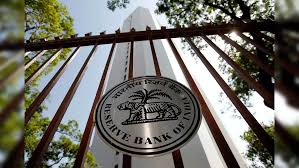
- 30 Jun 2025
In News:
In a major policy shift aimed at enhancing financial flexibility, the Reserve Bank of India (RBI) has reduced the Priority Sector Lending (PSL) target for Small Finance Banks (SFBs) from 75% to 60% of their Adjusted Net Bank Credit (ANBC).
What Has Changed?
Previous Norms:
- SFBs were required to allocate 75% of ANBC towards PSL.
- An additional 35% PSL requirement applied beyond the standard 40% applicable to universal banks.
- These strict targets led to:
- Difficulty in sourcing quality borrowers.
- Compressed profit margins.
- Limited portfolio diversification.
Revised Norms (2024):
- Overall PSL target reduced to 60% of ANBC.
- Additional PSL requirement brought down from 35% to 20%.
- Sub-sector allocation remains: SFBs must continue to dedicate 40% of ANBC to core PSL sectors such as agriculture, MSMEs, and weaker sections.
Objective of the Reform
- Enhance lending flexibility for SFBs.
- Improve asset quality and profitability by allowing portfolio diversification.
- Align SFB regulations more closely with those of other banks, without compromising on financial inclusion goals.
About Small Finance Banks (SFBs)
Origin and Mandate:
- Conceptualised by the NachiketMor Committee (2013).
- Regulated under the Banking Regulation Act, 1949.
- Created to expand financial inclusion by targeting:
- Small and marginal farmers,
- Micro and small enterprises (MSMEs),
- Unbanked and underserved populations.
Key Features:
- Offer basic banking services, including all deposit and small-ticket loan products.
- Operate on a localised model with strong rural and semi-urban outreach.
- Permitted to distribute non-risk sharing financial products like mutual funds and insurance.
Regulatory Requirements:
- At least 25% of branches in rural areas.
- Minimum 50% of loan portfolio must serve the MSME sector.
- Minimum net worth: ?100 crore at inception, to be raised to ?200 crore within 5 years.
- Maintain a Capital Adequacy Ratio (CAR) of 15% on risk-weighted assets.
Significance of the Move
- Offers SFBs greater operational autonomy and room to grow sustainably.
- Aims to balance developmental goals with commercial viability.
- Expected to promote credit flow to priority sectors while ensuring sound financial health of these institutions.
UN80 Initiative
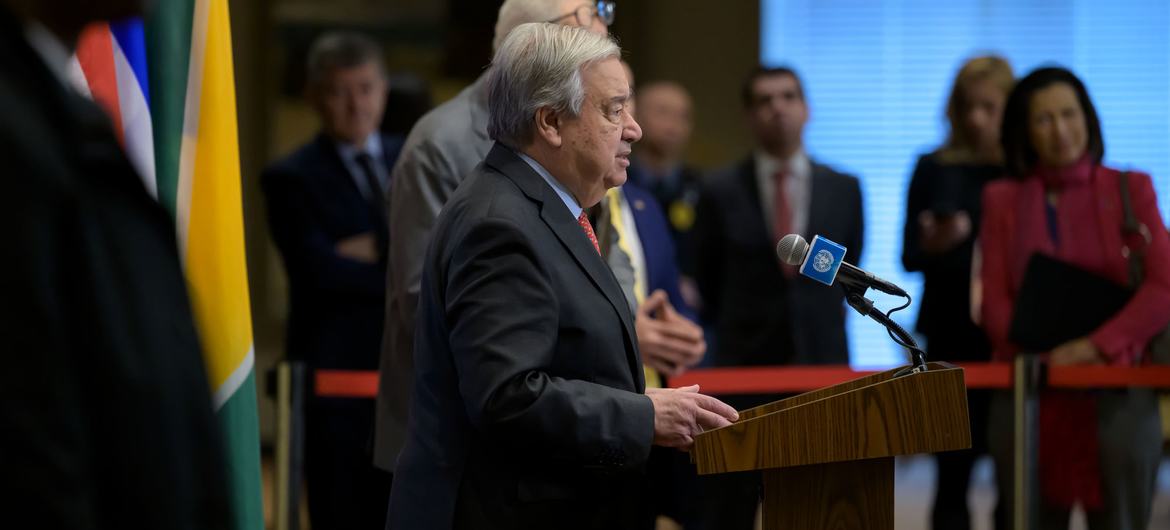
- 30 Jun 2025
In News:
In a significant move towards institutional transformation, UN Secretary-General António Guterres has launched the UN80 Initiative, aimed at overhauling the United Nations system in the run-up to the 80th anniversary of the UN Charter.
What is the UN80 Initiative?
The UN80 Initiative is a system-wide reform agenda designed to align the UN's structures, mandates, and operations with contemporary global challenges, including peacebuilding, sustainable development, and human rights.
Objectives:
- Modernize the UN architecture to improve responsiveness.
- Enhance accountability and reduce inefficiencies.
- Ensure effective delivery of core mandates in peace, development, and human rights.
Key Features of the UN80 Initiative:
1. Three Core Workstreams:
- Efficiency & Cost Reduction: Streamlining operations, eliminating overlaps, cutting administrative costs, and automating services.
- Mandate Implementation Review: Assessing the execution (not content) of over 3,600 UN mandates for effectiveness.
- Structural Reforms: Reorganizing departments and programs, especially in high-cost duty stations.
2. Formation of Thematic UN80 Clusters:
Seven thematic clusters focus on:
- Peace & Security
- Development (UN Secretariat and UN System)
- Humanitarian Affairs
- Human Rights
- Training & Research
- Specialized Agencies
3. Relocation and Rationalization:
- Proposes shifting operations from expensive cities like New York and Geneva.
- Seeks to abolish underperforming and redundant functions.
4. Budget Integration Timeline:
- Initial reforms to be reflected in the 2026 Revised Budget.
- Major structural reforms to be integrated into the 2027 Programme Budget.
Significance of the UN80 Initiative:
- Revitalizes Multilateralism: Supports the broader goals of the Pact for the Future and ensures the UN remains relevant.
- Boosts Operational Efficiency: Reduces waste, overlap, and underutilization of resources.
- Focuses on Results: Transitions from output-heavy reporting to impact-driven outcomes.
India’s Burden of Zero-Dose Children in 2023
- 30 Jun 2025
In News:
According to a recent Lancet study based on Global Burden of Disease data, India ranked second globally in terms of the number of unvaccinated or “zero-dose” children in 2023, trailing only Nigeria.
What Are Zero-Dose Children?
- The term “zero-dose children” refers to those who have not received even a single dose of any routine childhood vaccine.
- In 2023, 1.44 million children in India were identified as zero-dose, highlighting significant immunisation gaps.
Global and National Trends:
- Nigeria topped the list with approximately 2.5 million zero-dose children.
- Eight countries, including India and Nigeria, together accounted for over 50% of the global zero-dose burden.
- Globally, the number of zero-dose children dropped from 58.8 million in 1980 to 14.7 million in 2019, reflecting long-term progress.
Challenges in India:
- Despite the Universal ImmunisationProgramme (UIP) covering 12 vaccine-preventable diseases, several challenges persist:
- COVID-19 pandemic led to significant disruptions in routine immunisation.
- Vaccine hesitancy continues to undermine public health efforts.
- Geographical and socio-economic inequalities limit access to health services in certain regions.
- Between 2010 and 2019, measles vaccine coverage declined in over 100 countries, including India, further exacerbating public health risks.
Sree Narayana Guru
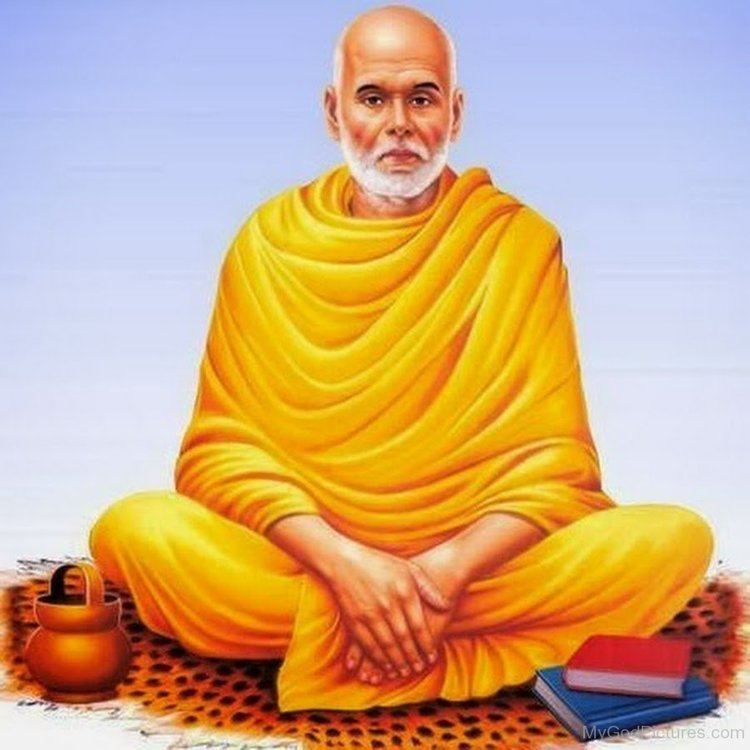
- 29 Jun 2025
In News:
The Prime Minister recently attended the centenary celebrations of the historic 1925 conversation between Mahatma Gandhi and Sree Narayana Guru, held at Vigyan Bhawan, New Delhi. The event marked the enduring relevance of Guru's message of social equality, spiritual unity, and reform.
Who was Sree Narayana Guru?
- Born: 20 August 1856, in a backward Ezhava community in Kerala
- Died: 20 September 1928
- Role: Spiritual leader, philosopher, poet, yogi, and one of India’s foremost social reformers from Kerala
Historical Context:
- During the 19th century, Kerala society was deeply caste-ridden, and the Ezhava community was subjected to systemic social exclusion.
- Guru revolted against caste oppression, advocating for spiritual liberation without ritual orthodoxy.
Core Philosophy:
- Message of Universal Unity:“OruJathi, OruMatham, OruDaivam, Manushyanu”
(One Caste, One Religion, One God for Mankind) — a powerful call for social harmony, inclusivity, and humanism. - Non-violent transformation:Unlike many radical reform movements, Guru’s approach was inclusive and reformative, rejecting social division without inciting confrontation.
Key Contributions:
- Religious and Spiritual Reforms:
- Aruvippuram Movement (1888):
- Consecrated a Shiva idol at Aruvippuram — a direct challenge to Brahmanical dominance and the exclusion of lower castes from temple worship.
- Established over 40 temples in Kerala, allowing unrestricted worship by the marginalized.
- Promoted yoga and meditation, and spent years in hermitage to attain spiritual depth.
- Aruvippuram Movement (1888):
- Social Reforms:
- Founded the Sivagiri Mutt (1904) near Varkala — a centre for spiritual and social awakening.
- SNDP Yogam (1903):
-
- Full form: Sri Narayana Guru Dharma ParipalanaYogam
- Aimed at securing education, government access, and political rights for the Ezhavas.
- Guru was the permanent chairman; Kumaran Asan, his disciple, became general secretary.
-
- Vaikom Satyagraha:Played a pivotal role in the anti-untouchability movement, alongside leaders like Mahatma Gandhi and Periyar.
- Promoted free education, ashrams, and vocational training for underprivileged children and communities.
- Sivagiri Foundation and Pilgrimage:
- Founded in 1924 to promote values like:Cleanliness, education, devotion, agriculture, handicrafts, and trade
- SivagiriTheerthadanam (pilgrimage):Initiated by his followers to reinforce values of purity, education, and organization
Literary Contributions:
- Guru was a Vedantic scholar and philosopher-poet. His notable works include:
- Advaitha Deepika
- Atmavilasam
- DaivaDasakam
- BrahmavidyaPanchakam
These texts reflected Advaita (non-dualist) philosophy, spiritual self-realization, and social ethics.
Legacy and Recognition:
- Revered as “Gurudevan”by his followers
- His birth and death anniversaries are observed as public holidays in Kerala and some other states
- Celebrated as Sri Narayana Jayanthi
Candida tropicalis
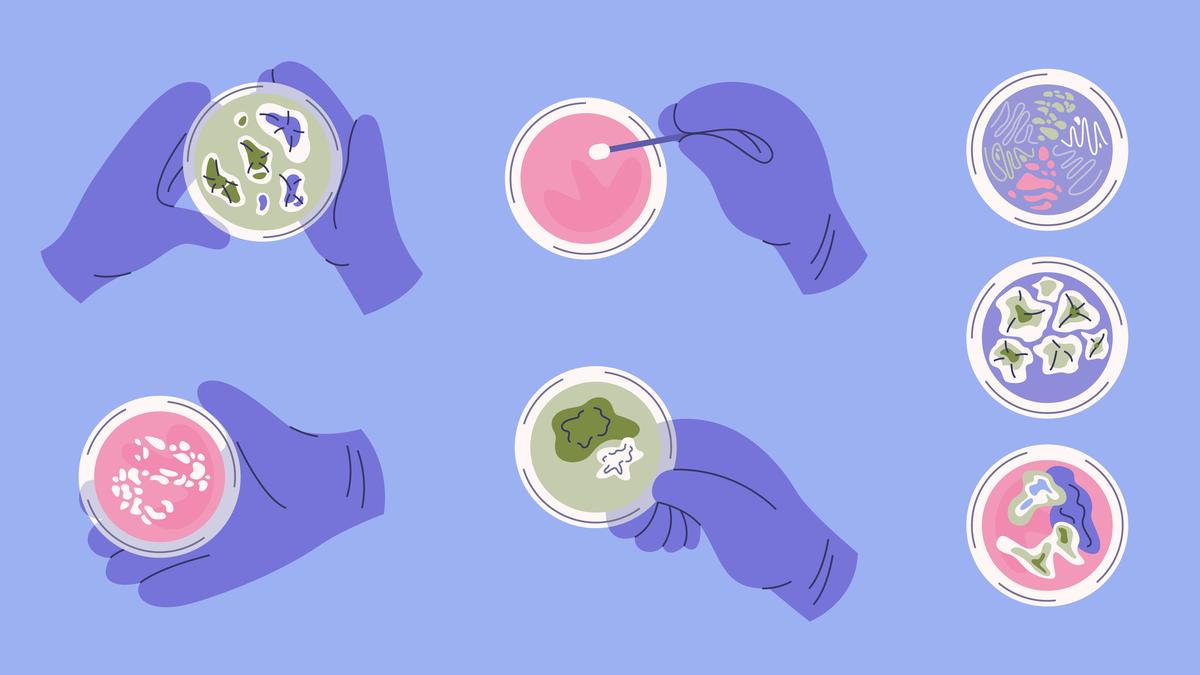
- 29 Jun 2025
In News:
A recent study published in PLoS Biology by researchers from Fudan University, China, has uncovered a disturbing link between the agricultural use of a common fungicide and the emergence of azole-resistant Candida tropicalis, a fungal pathogen responsible for high-mortality infections, especially in India and other tropical regions.
Candida tropicalis and Public Health Risk
- Candida tropicalis is a major fungal pathogen, particularly prevalent in India, associated with mortality rates of 55–60%.
- Azole-class antifungal drugs, such as fluconazole and voriconazole, are frontline treatments.
- Growing drug resistance is being reported in clinics globally, raising serious concerns for treatment efficacy and public health.
Fungicide Link to Drug Resistance
- Tebuconazole, a triazole-based fungicide, widely used in agriculture and gardening, has been found to be the primary driver of cross-resistance to clinical azoles in C. tropicalis.
- Tebuconazole accumulates and persists in the environment, exerting selective pressure on fungal strains.
- Clinical strains exposed to tebuconazole showed cross-resistance to both fluconazole and voriconazole.
Mechanism of Resistance: Ploidy Plasticity and Aneuploidy
- Resistant strains exhibit aneuploidy – a deviation in chromosome number, often with duplications or deletions of chromosome segments.
- This phenomenon, termed ploidy plasticity, is rare in most organisms due to its detrimental effects, but in C. tropicalis, it enables adaptive resistance.
Genetic Changes Observed:
- Duplication of TAC1 gene segment led to overexpression of ABC-transporters, proteins that pump out azoles and reduce their effectiveness.
- Deletion of HMG1 gene segment increased the synthesis of ergosterol, a compound crucial to fungal membranes, thus enhancing azole resistance.
- These adaptations allowed the resistant strains to trade growth rate for survival under antifungal pressure.
Emergence of Stable Haploid Strains
- The study unexpectedly identified haploid strains of C. tropicalis among resistant isolates.
- These haploids were found to be mating-competent, raising concerns over the genetic transfer of resistance traits.
- Further genomic analysis confirmed that naturally occurring haploid strains also exist, such as two clinical isolates from Spain.
Virulence and Resistance in Animal Models
- In mouse models, strains with altered ploidy exhibited greater virulence than their progenitor strains when treated with fluconazole.
- This finding suggests a dual threat: enhanced resistance and increased disease severity.
Implications and Concerns
- The unregulated and widespread use of triazole fungicides like tebuconazole in agriculture is unintentionally selecting for clinically significant drug resistance.
- These resistant fungal strains pose a direct threat to human health, particularly in immunocompromised patients and in settings with limited alternative antifungal therapies.
- Resistant strains can potentially spread and recombine through mating, complicating containment efforts.
State of the Climate in Asia 2024 Report
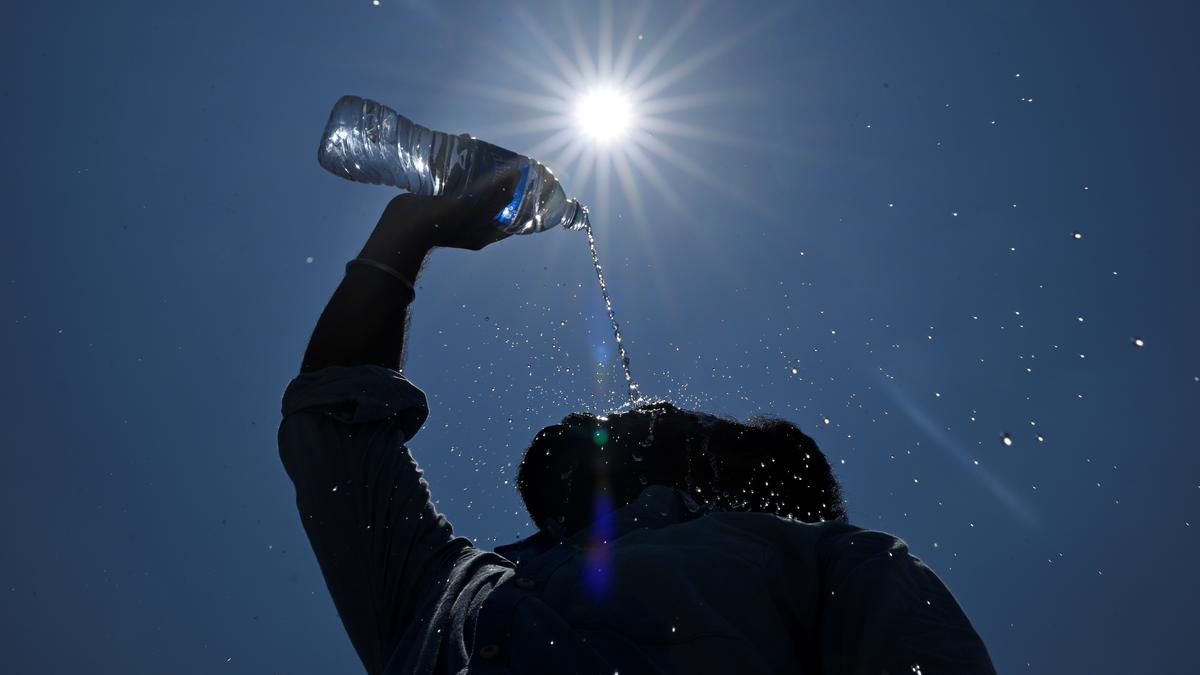
- 29 Jun 2025
In News:
The World Meteorological Organization (WMO) has released its annual State of the Climate in Asia 2024report, highlighting alarming trends in climate change impacts across the Asian continent. The report confirms that Asia is warming at nearly twice the global average, causing severe socio-economic and environmental consequences.
Key Climate Trends and Indicators in Asia (2024)
- Record Heat:The year 2024 was the warmest year in Asia’s history, marked by prolonged and widespread heatwaves across land and oceanic areas.
- Global Comparison:The global mean temperature in 2024 was the highest on record (1850–2024), surpassing the previous record of 1.45°C set in 2023. Each year between 2015 and 2024 ranks among the 10 warmest globally.
- Sea Surface Temperatures & Marine Heatwaves:Sea surface temperatures reached record highs,with Asian waters warming nearly twice as fast as the global average. Most Asian ocean areas experienced strong to extreme marine heatwaves, especially in the northern Indian Ocean, East China Sea, Yellow Sea, and waters near Japan.
- Sea Level Rise:Sea levels rose faster than the global average on both Pacific and Indian Ocean coasts of Asia, exacerbating risks for low-lying coastal areas.
Cryospheric Changes and Glacier Loss
- In Central Himalayas and Tian Shan ranges, 23 out of 24 monitored glaciers experienced mass loss in 2024.
- Consequences included increased risk of glacial lake outburst floods (GLOFs), landslides, and long-term threats to water security.
Scientific Warnings and Observations
The report highlights that the warming trend from 1991 to 2024 in Asia is nearly twice as fast as that between 1961 and 1990, underlining the acceleration of climate risks.
Implications for Asia
- Environmental:Rapid glacier melt, rising sea levels, and extreme weather are disrupting ecosystems, causing habitat loss and biodiversity decline.
- Economic:Agriculture, fisheries, and coastal infrastructure are suffering massive losses due to droughts, floods, and storms.
- Social:Heatwaves, displacements, and disaster-related fatalities are disproportionately affecting vulnerable populations, including the poor and elderly.
Digital Public Infrastructure for Fraud Risk Management
- 29 Jun 2025
In News:
The Reserve Bank of India (RBI) is set to develop a Digital Public Infrastructure for Fraud Risk Management (DPIP) under its supervision to curb rising instances of banking frauds in India. This aligns with broader efforts to enhance security and transparency in India’s financial ecosystem.
What is Digital Public Infrastructure (DPI)?
- Definition: DPI refers to foundational digital systems that are accessible, secure, interoperable, and designed to deliver essential public services.
- Examples in India:
- Aadhaar (Digital ID)
- Unified Payments Interface (UPI)
- DigiLocker, CoWIN, etc.
About DPIP
- Objective:To enhance fraud risk management through real-time intelligence sharing, data gathering, and interbank coordination using advanced technologies.
- Key Features:
- Will strengthen existing fraud detection systems in the banking ecosystem.
- Enables interoperable intelligence sharing between banks and financial institutions.
- Leverages AI/ML tools and data analytics for better predictive fraud detection.
- Institutional Mechanism:
- A committee under Shri A.P. Hota has been constituted to examine various aspects of DPIP’s implementation.
- RBI Innovation Hub (RBIH) is tasked with developing a prototype, in consultation with 5–10 public and private sector banks.
Need for DPIP
- Rise in Bank Frauds:
- As per RBI’s Annual Report:
- FY 2024: ?12,230 crore in frauds
- FY 2025: ?36,014 crore — almost 3x increase
- Increasing sophistication of cyber threats and fraud techniques necessitates robust preventive digital infrastructure.
- As per RBI’s Annual Report:
Other RBI Initiatives to Combat Bank Frauds
Initiative Description
Multi-Factor Authentication (MFA) Mandatory for all digital/electronic payments to ensure
secure transactions.
Zero Liability Framework Customers are not liable for losses arising from bank’s
negligence or third-party breaches.
bank.in and fin.in domains Reserved for verified bank websites to help customers
avoid phishing and fake sites.
Enhanced Rock Weathering (ERW)
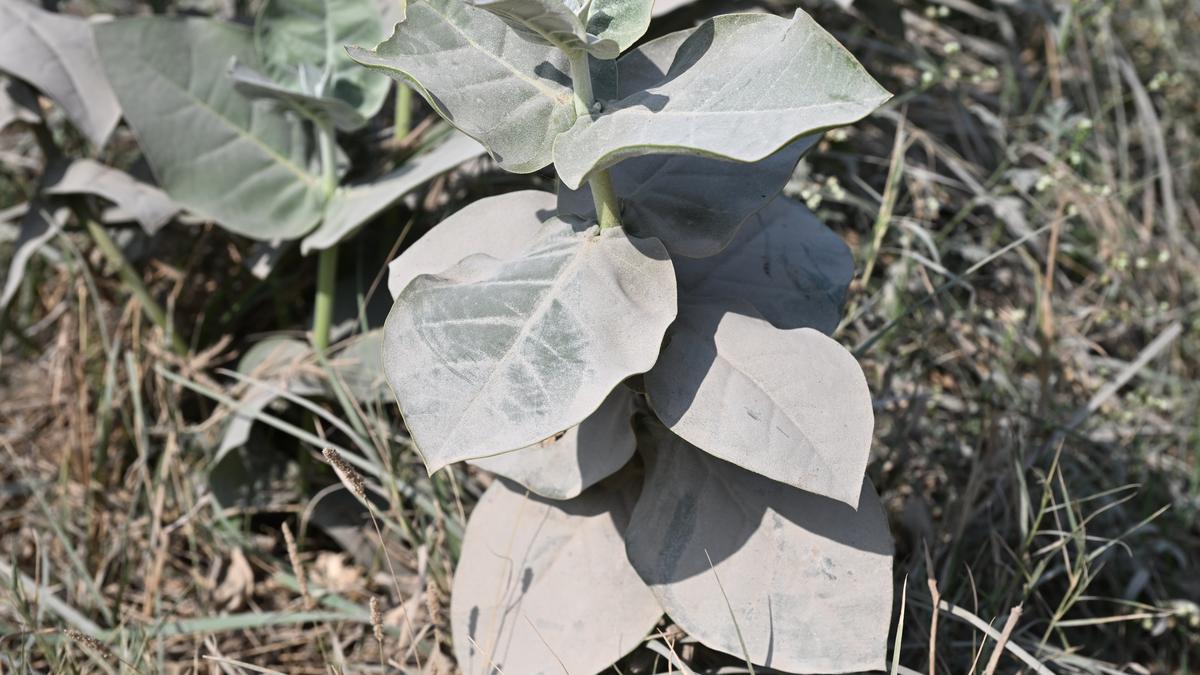
- 29 Jun 2025
In News:
Enhanced Rock Weathering (ERW) is emerging as a novel nature-based carbon removal strategy, gaining global traction from Brazil’s sugar plantations to tea estates in India. It is being explored as a scalable solution to climate change through natural carbon capture mechanisms.
What is Enhanced Rock Weathering (ERW)?
- Definition: ERW is a geoengineering technique that accelerates the natural chemical process of rock weathering to capture and store atmospheric carbon dioxide (CO?).
- Scientific Basis:
- Natural weathering involves the breakdown of silicate rocks through carbonic acid, formed when CO? dissolves in water, eventually locking the carbon in stable forms like bicarbonate or limestone.
- ERW accelerates this process using fast-weathering rocks like basalt, ground into fine particles to maximize surface area and reactivity.
Effectiveness and Challenges
- Potential Carbon Removal:
- A US-based study found that 50 tonnes of basalt/hectare/year could potentially remove up to 10.5 tonnes of CO?/hectare over four years.
- However, field trials in Malaysia (oil palm) and Australia (sugarcane) have shown lower than expected carbon capture rates.
- Key Variables Affecting Effectiveness:
- Rock type and mineralogy
- Soil characteristics
- Temperature and rainfall patterns
- Land management practices
- Measurement Difficulties:
- Current techniques often overestimate CO? capture due to detection of cations that form even in the absence of carbonic acid reactions.
- Risk: This can lead to inaccurate carbon credit claims, undermining offset integrity.
Co-Benefits of ERW
- Soil Health Improvement:
- Increases soil alkalinity → Improves nutrient availability and crop productivity.
- Contributes to soil formation and resilience.
- Resource Efficiency:Basalt is abundant and often a quarrying by-product, lowering costs and emissions associated with mining.
- Ocean Acidification Mitigation:Even if CO? isn't sequestered directly, rock in the soil can neutralize acidic runoff, preventing CO? release from aquatic systems downstream.
Risks and Concerns
- Health & Safety:
- Finely crushed rock may contain toxic heavy metals (depending on composition).
- Protective equipment is necessary during application.
- Carbon Credit Integrity:Overestimated CO? removal may allow companies to offset emissions inaccurately, leading to net increase in atmospheric carbon.
Global Adoption and Projects
- Countries Involved:Brazil, India, USA, Europe, and Latin America are trialing or implementing ERW.
- India Focus:Trials underway in Darjeeling tea plantations and other agricultural regions through startups like Mati Carbon.
- Global Milestones:
- First verified ERW carbon removal credits issued from a Brazilian project.
- Google signed the largest ERW deal for 200,000 tonnes of CO? removal credits (to be delivered by early 2030s).
- Terradot, an ERW company, sold 90,000 tonnes of carbon credits for $27 million, backed by firms like H&M.
Investor Interest and Innovation Push
- Private Sector Engagement:ERW has attracted big tech, fast fashion, and aviation sectors seeking nature-based offset solutions.
- Prize Recognition:Mati Carbon won the $50 million X Prize for carbon removal, recognizing the potential scalability and innovation of ERW.
India’s Coffee Exports
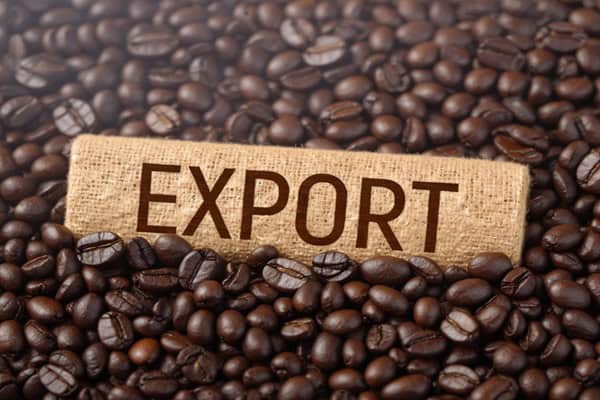
- 28 Jun 2025
In News:
India has emerged as a significant player in the global coffee trade, with its exports witnessing a sharp rise of 125% in the past 11 years, increasing from $800 million in 2014–15 to $1.8 billion in 2023–24, and continuing the momentum with over 25% growth in FY2025–26. This export surge highlights India's expanding footprint in the global premium coffee market, driven by a blend of policy support, sustainable cultivation practices, and global demand for specialty coffee.
Key Drivers of Export Growth
The Coffee Board of India, under the Ministry of Commerce, has played a pivotal role in this transformation through:
- Digitalisation of export permits, RCMC, and certificates of origin.
- Export incentives like freight and transit assistance—?3/kg for value-added exports and ?2/kg for green coffee to distant markets (e.g., US, Canada, Japan, Nordic countries).
- Subsidy support of 40% (up to ?15 lakh) for processing units (roasting, grinding, packaging).
- Global market intelligence and regular industry engagement to remove bottlenecks.
- Promotion via GI tags and digital branding campaigns.
These efforts have enhanced India’s readiness to meet stringent import regulations (e.g., EU deforestation norms) while enabling access to new and emerging markets.
Production and Cultivation
India is the 7th largest producer of coffee globally, accounting for about 3.5% of world production and ranks 5th in global coffee exports with a 5% share. The country produces 3.5–4 lakh tonnes of coffee annually, with Karnataka (70%), Kerala, and Tamil Nadu being major contributors.
- Arabica varieties: Kents, S.795, Cauvery, Selection 9.
- Robusta: High-yielding selections suited to Indian climate.
Climatic Features:
- Grown under two-tier shade canopies with over 50 native tree species.
- Arabica thrives at 1000–1500m, Robusta at 500–1000m altitudes.
- Requires 1600–2500 mm rainfall and 15°C–25°C temperature.
India is unique as the only country that cultivates 100% shade-grown coffee, which promotes biodiversity, soil and water conservation, and ensures a sustainable income for 2 million people, including small and marginal farmers.
Specialty and GI-Tagged Coffee
India’s coffee is known for its mild acidity, full-bodied flavour, and fine aroma. Intercropping with spices like pepper, cardamom, and vanilla further enhances its appeal. The country also boasts five regional and two specialty coffees with Geographical Indication (GI) tags, strengthening brand value in global markets.
The historic legacy of Indian coffee dates back over 400 years to the planting of coffee beans by Baba Budan in Karnataka, making it one of the oldest coffee traditions in Asia.
The Emergency in India (1975–1977)
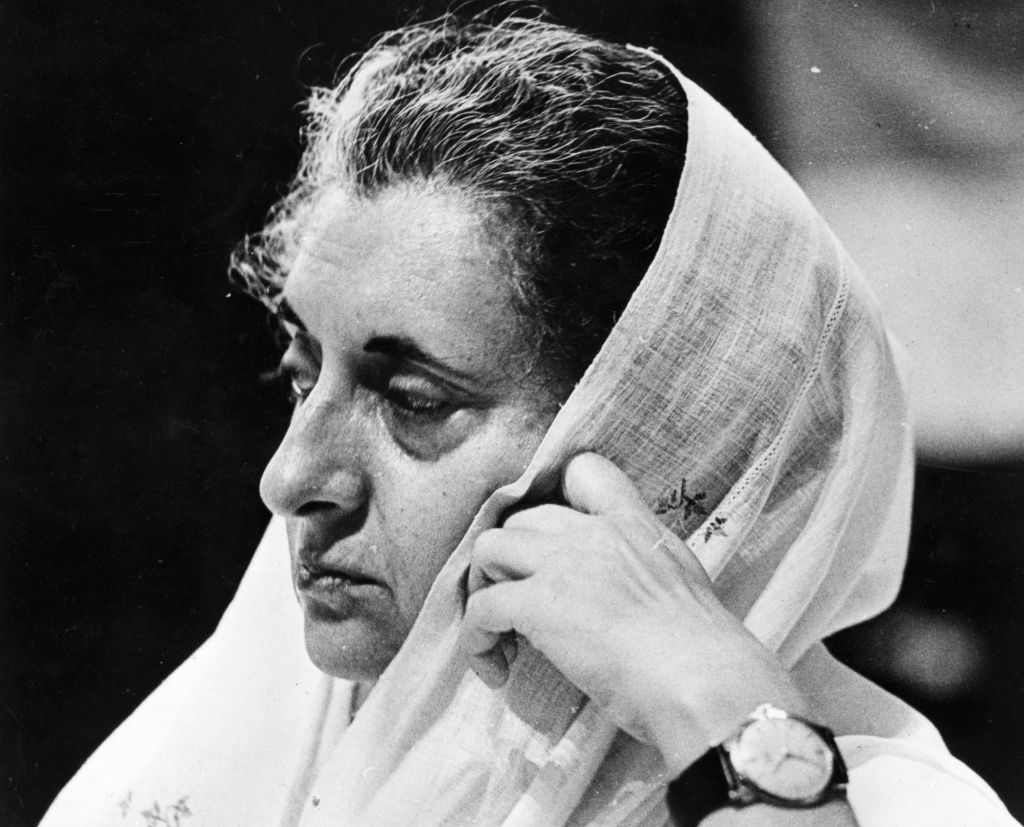
- 28 Jun 2025
In News:
The declaration of Emergency in India from 25 June 1975 to 21 March 1977 marks one of the most debated and transformative chapters in the country’s post-independence history. Proclaimed under Article 352 of the Constitution citing “internal disturbance”, this period had far-reaching legal, political, and social consequences. It served as a stress test for India’s democratic institutions and led to significant constitutional reforms.
Background:
- The early 1970s were marked by growing political discontent. Nationwide protests, especially in Bihar and Gujarat, were spearheaded by Jayaprakash Narayan against issues such as rising unemployment, inflation, corruption, and misuse of political power.
- The immediate provocation came from the Allahabad High Court’s judgment on 12 June 1975, which found Prime Minister Indira Gandhi guilty of electoral malpractice in her 1971 Lok Sabha campaign. The Court disqualified her from contesting elections for six years under the Representation of the People Act, 1951.
- Though the Supreme Court granted a conditional stay, political pressure intensified, with mass movements demanding her resignation.
Proclamation of Emergency
On 25 June 1975, President Fakhruddin Ali Ahmed, on the advice of the Prime Minister, declared a national Emergency under Article 352, citing internal disturbance. This was the third Emergency in India — the first two being during external wars (1962 with China and 1971 with Pakistan). However, this was the first peacetime Emergency.
Constitutional Basis
At that time, Article 352 allowed Emergency on three grounds:
- War
- External Aggression
- Internal Disturbance (later amended to “armed rebellion” by the 44th Amendment, 1978)
Suspension of Fundamental Rights
Two days later, on 27 June 1975, the government invoked:
- Article 358: Automatically suspended the freedoms under Article 19 (freedom of speech, assembly, movement, etc.)
- Article 359: Allowed suspension of Articles 14, 21, and 22, stripping protections related to equality before law, life and personal liberty, and protection against preventive detention.
Citizens lost access to courts for constitutional remedies. Prominent opposition leaders, including Jayaprakash Narayan, Morarji Desai, Atal Bihari Vajpayee, and L.K. Advani, were arrested under the Maintenance of Internal Security Act (MISA). According to the Shah Commission, around 35,000 individuals were detained without trial.
Censorship and Media Suppression
From 26 June 1975, press censorship was imposed. Newspapers were mandated to get clearance from government-appointed censors before publication. International news coverage was also tightly controlled, with telex messages of foreign correspondents placed under surveillance.
Key developments:
- On 20 July 1975, the Board of Film Censors was restructured to impose stricter control over cinema.
- On 1 February 1976, the four national news agencies — PTI, UNI, Samachar Bharati, and Hindustan Samachar — were merged into ‘Samachar’.
- The Press Council of India was dissolved.
Constitutional Amendments and Legislative Overreach
Several constitutional amendments were enacted to consolidate power:
- 38th Amendment (1975): Made the President’s Emergency declaration non-justiciable.
- 39th Amendment (1975): Excluded Prime Minister’s election from judicial review.
- 42nd Amendment (1976) (termed “Mini-Constitution”):
- Gave primacy to Directive Principles over Fundamental Rights
- Extended Lok Sabha and State Assembly terms from 5 to 6 years
- Limited judicial review, centralised authority
- Empowered Parliament to amend the Constitution without court scrutiny
Sterilisation Campaign
One of the most controversial aspects was the forced sterilisationprogramme led by Sanjay Gandhi. While aimed at population control, it resulted in widespread coercion and human rights violations.
- 1975–76: 26.42 lakh sterilisation procedures
- 1976–77: 81.32 lakh
- Total over two years: 1.07 crore
- Many were linked to access to ration cards, housing, loans, and employment
End of Emergency and Democratic Reversal
The Emergency was revoked on 21 March 1977. In the subsequent general elections (March 1977), the Congress party was defeated, and the Janata Party under Morarji Desai assumed power. This marked the first non-Congress government at the Centre
Post-Emergency Reforms: The Shah Commission and 44th Amendment
The Shah Commission (1977–79)
Set up in May 1977, chaired by Justice J.C. Shah, it investigated:
- Illegal arrests and detentions
- Press censorship
- Forced sterilisation
- Bureaucratic misuse and political excesses
44th Constitutional Amendment (1978)
To prevent future misuse:
- Replaced “internal disturbance” with “armed rebellion” as a ground for Emergency
- Restored judicial review of Emergency proclamations
- Safeguarded Fundamental Rights, particularly Articles 20 and 21
- Ensured Cabinet approval was mandatory before Emergency declaration
Dharti AabaJanbhagidari Abhiyan (DAJA)
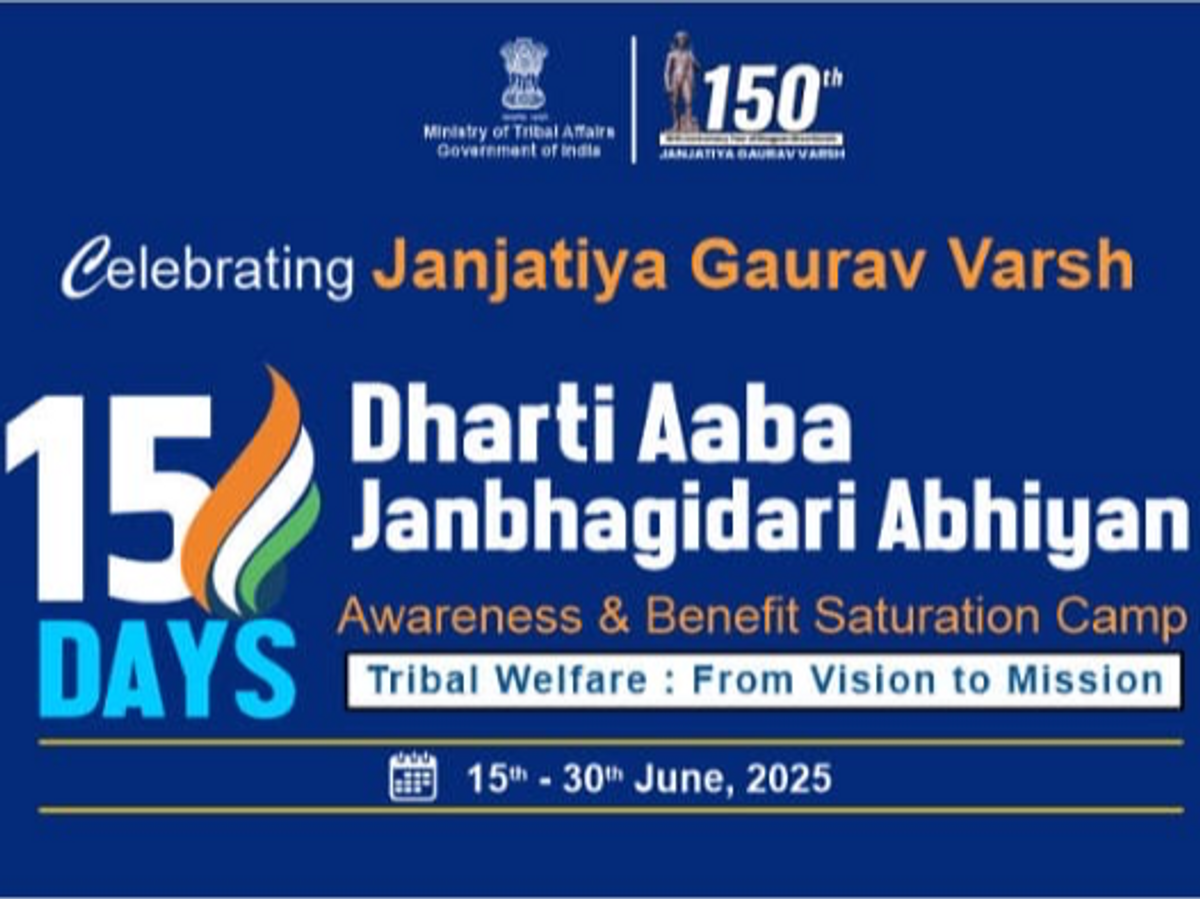
- 28 Jun 2025
In News:
In a landmark initiative for tribal inclusion, the Government of India has launched the Dharti AabaJanbhagidari Abhiyan (DAJA)—India’s largest-ever tribal outreach and empowerment campaign. The programme aims to ensure saturation of welfare schemes and promote tribal pride and participation, covering over 1 lakh tribal villages and PVTG habitations across 31 States and Union Territories.
What is DAJA?
- Full Name: Dharti AabaJanbhagidari Abhiyan — named in honour of Bhagwan Birsa Munda, a revered tribal freedom fighter.
- Launched by: Ministry of Tribal Affairs, Government of India.
- Nature: A people-centric campaign focused on participatory governance and last-mile delivery of services among Scheduled Tribes (STs) and Particularly Vulnerable Tribal Groups (PVTGs).
Objectives of DAJA
- Saturate government welfare schemes across all tribal settlements.
- Empower over 5.5 crore tribal citizens through Janbhagidari (people’s participation).
- Preserve and promote tribal identity and cultural heritage, invoking the legacy of Birsa Munda.
- Strengthen last-mile governance through technological and administrative convergence.
Key Features:
Feature Description
Geographic Coverage - 1 lakh+ tribal villages, including remote PVTG habitations, across 31 States/UTs.
Scheme Integration - Converges services such as Aadhaar, Ayushman Bharat, PM Kisan, PM
Ujjwala, Jan Dhan, pension schemes, and Forest Rights Act (FRA) claims.
Five Foundational Pillars -
- Janbhagidari (people’s participation)
- Saturation of welfare benefits
- Cultural inclusion
- Convergence of schemes
- Last-mile delivery
Technology-Driven Monitoring - Use of real-time dashboards and data analytics for
transparent tracking and reporting.
Cultural Revival - Celebrates tribal cuisines, folk arts, handicrafts, and oral traditions
during outreach camps to reaffirm cultural identity.
Significance:
- Governance: Represents a shift toward targeted and integrated tribal welfare, reducing administrative fragmentation.
- Inclusion: PrioritisesPVTGs, often the most marginalised and underserved groups.
- Empowerment: Embeds a participatory model, aligning with the spirit of democratic decentralisation.
- Cultural Reaffirmation: Bridges the gap between development and cultural identity, crucial for tribal dignity and preservation.
India’s Data Imperative – The Pivot Towards Quality
- 28 Jun 2025
In News:
In a significant policy intervention, NITI Aayog has released the report titled “India’s Data Imperative: The Pivot Towards Quality”, calling for urgent reforms to enhance the integrity, interoperability, and usability of India’s public data systems. The report underscores the critical role of data in governance, welfare delivery, and digital innovation.
Understanding India’s Public Data Ecosystem
India's data ecosystem constitutes a vast digital public infrastructure that powers governance and service delivery across sectors. It integrates identity, finance, health, and welfare through data-centric platforms:
- Aadhaar: Over 27 billion authentications in FY 2024–25; foundational for identity-linked services.
- UPI: Handles transactions worth ?23.9 trillion monthly — the world’s largest real-time digital payment system.
- Ayushman Bharat Digital Mission: 369 million health IDs issued; enhancing interoperability in healthcare.
- Direct Benefit Transfer (DBT): ?5.47 lakh crore transferred in FY 2024–25 across 330+ schemes.
- Aadhaar e-KYC: 1.8 billion transactions, significantly reducing onboarding costs and time.
- Digital Inclusion: Over 1.2 billion mobile subscribers and 800 million internet users reflect the scale of India’s digital penetration.
Why India Needs a Quality-Driven Data Ecosystem
- Curb Fiscal Leakage:Inaccurate or duplicate data inflates welfare expenditure by 4–7% annually.
- Enable Evidence-Based Governance:Data-driven insights power AI-led service delivery, improve beneficiary targeting, and strengthen accountability.
- Foster Public Trust:The legitimacy of digital governance depends on accurate, timely, and reliable data systems.
- Strengthen India’s AI & Innovation Ecosystem:Clean, validated data is essential for building AI applications in healthcare, agriculture, and citizen services.
- Enhance Cross-Ministerial Coordination:Interoperable data frameworks help break silos and improve policy coherence across ministries.
Key Challenges in India’s Data Governance Landscape
Challenge Description
Fragmentation Departmental silos with non-standardised data formats hinder seamless integration.
Lack of Ownership Absence of clear data custodians leads to accountability gaps.
Legacy Systems Outdated IT systems impede real-time updates and data sharing.
Incentive Mismatch Existing frameworks reward speed over accuracy, eroding data quality.
Poor Quality Culture A prevailing acceptance of “80% accuracy is good enough” weakens long-term integrity.
NITI Aayog’s Recommendations for Reform
- Institutionalise Data Ownership:Designate dedicated data custodians at national, state, and district levels to oversee quality.
- Incentivise Accuracy:Incorporate data quality metrics into performance appraisals and financial allocations.
- Promote Interoperability:Adopt standards like IndEA (India Enterprise Architecture) and NDGFP (National Data Governance Framework Policy) to ensure consistency.
- Use Practical Tools:Implement tools like the Data Quality Scorecard and Maturity Framework for ongoing assessment.
- Build Capacity:Train field-level personnel and managers to prioritise data fidelity as a core administrative function.
Significance of the Report
This report arrives at a critical juncture when India is rapidly expanding its digital public infrastructure but faces risks from data inaccuracy, siloed systems, and erosion of trust. By shifting focus from quantity to quality, NITI Aayog envisions a resilient, inclusive, and innovation-friendly data regime—essential for achieving Digital India goals and Sustainable Development Objectives.
Total Revolution
- 28 Jun 2025
In News:
India commemorates the 51st anniversary of Jayaprakash Narayan’s (JP) historic call for “Sampoorna Kranti” or Total Revolution, first proclaimed on June 5, 1974, at Gandhi Maidan, Patna. The movement remains a landmark in India's democratic evolution, reflecting enduring concerns over governance, democracy, and civic empowerment.
What is Total Revolution?
- Concept: A holistic, non-violent movement rooted in Gandhian ideals, aimed at comprehensive transformation—political, economic, social, cultural, and spiritual.
- Vision: Building a just and equitable society through decentralised democracy, moral rejuvenation, and participatory governance.
- Leadership: Spearheaded by Jayaprakash Narayan (JP), advocating a “party-less democracy” blending Gandhian ethics, Sarvodaya ideals, and Marxist critique.
Underlying Causes of the Movement
- Electoral Legitimacy Crisis:The 1975 Allahabad High Court judgment disqualified Prime Minister Indira Gandhi for electoral malpractices, eroding her authority and galvanising mass opposition.
- Youth Unrest:Movements like Navnirman Andolan (Gujarat) and Bihar student protests reflected mounting youth dissatisfaction over unemployment and poor governance.
- Economic Distress:The early 1970s saw inflation exceeding 20%, acute unemployment, and food shortages, leading to widespread discontent.
- Democratic Backsliding:Use of draconian laws like MISA, increased centralisation, and suppression of dissent led to civil society mobilisation.
- Charismatic Mobilisation:JP’s appeal for non-violent civic awakening and his ability to unify diverse ideological streams helped launch a broad-based national movement.
Core Components of the Total Revolution
Domain Focus
Political Advocated bottom-up governance, decentralisation, and accountability
to counter bureaucratic authoritarianism.
Economic Promoted land reforms and people-centric development to address inequality.
Social Called for eradication of casteism, gender bias, and dowry to foster egalitarianism.
Educational Suggested reforms emphasisingethics, rural upliftment, and vocational training.
Cultural-Spiritual Encouraged self-discipline, national unity, and moral regeneration.
Impact of Total Revolution
On Society and Citizenry
- Youth Mobilisation: Inspired a generation of political leaders—Lalu Prasad Yadav, Nitish Kumar, Sushil Modi—who reshaped regional politics.
- Civic Engagement: Fostered a deeper culture of public accountability and democratic participation.
- Non-Violent Resistance: Reinforced the efficacy of peaceful protest, a legacy echoed in later movements like Anna Hazare’s anti-corruption crusade.
On Governance and Policy
- Collapse of Congress Monopoly: Led to the formation of the Janata Party, marking a historic electoral defeat for the Congress in 1977.
- Constitutional Safeguards: Triggered the 44th Constitutional Amendment, curbing emergency powers and restoring judicial oversight.
- Democratic Deepening: Inspired Panchayati Raj reforms through the 73rd and 74th Amendments, enhancing grassroots democracy.
Significance and Contemporary Relevance
- Democratic Dissent: Reinvigorated the right to protest as a fundamental democratic tool.
- Leadership Incubation: Nurtured mass-based political leadership, altering India’s political landscape.
- Institutional Vigilance: Exposed systemic vulnerabilities, prompting long-term institutional reforms.
- Civic Awakening: Broadened the role of civil society in governance beyond electoral cycles.
- Modern-Day Lessons: Offers vital insights for addressing centralisation of power, youth alienation, and democratic backsliding in contemporary India.
Haemophilia A
- 27 Jun 2025
In News:
The National Institute of Immunohaematology (NIIH) has indigenously developed a simple, affordable, and rapid point-of-care test kit for the early diagnosis of Haemophilia A and Von Willebrand Disease (VWD). This development marks a significant step in improving accessible healthcare diagnostics for genetic bleeding disorders in India.
Significance of the Innovation:
- Affordable and accessible: Enables early diagnosis at primary health centres and in low-resource settings.
- Supports Universal Health Coverage: Improves detection and timely treatment, reducing morbidity.
- Make in India in Health Sector: A boost to indigenous biomedical research and diagnostics.
About Haemophilia A
What is it?
- A hereditary bleeding disorder caused by insufficient levels of Factor VIII, a protein essential for blood clotting.
- Part of the broader group of genetic conditions known as inherited coagulopathies.
Causes:
- Deficiency or dysfunction of coagulation Factor VIII in the coagulation cascade.
- Usually inherited through an altered gene passed from parents.
Genetic Transmission:
- X-linked recessive inheritance:
- Males with the defective gene express the disease.
- Females are typically carriers, though they may show mild symptoms.
Symptoms:
- Prolonged bleeding, often seen after circumcision or minor injuries.
- Internal bleeding, particularly into joints, causing pain and swelling.
- Other signs include:
- Nosebleeds
- Blood in stool/urine
- Bruising
- Bleeding after surgery or dental procedures
Treatment:
- Factor VIII replacement therapy: Intravenous infusion of the missing clotting factor.
- Preventive therapy (prophylaxis) to reduce the frequency of bleeding episodes.
About Von Willebrand Disease (VWD)
What is it?
- A genetic bleeding disorder caused by a deficiency or dysfunction of von Willebrand factor (VWF), which helps platelets stick together to form blood clots.
Causes:
- Inherited from one or both parents.
- People with VWD have:
- Low levels of VWF, or
- VWF that does not function properly.
Symptoms:
- Often asymptomatic unless triggered by injury or surgery.
- Common symptoms include:
- Easy bruising
- Frequent nosebleeds
- Bleeding gums
- Heavy or prolonged menstruation (menorrhagia)
- Post-operative bleeding
- Severe cases may show:
- Internal joint bleeding
- Blood in urine (hematuria)
- Blood in stool (melena)
Treatment:
- No cure, but manageable with:
- Desmopressin (DDAVP) to release stored VWF.
- VWF and Factor VIII concentrates.
- Self-care measures to reduce bleeding risks.
Household Income Survey in 2026

- 27 Jun 2025
In News:
The Ministry of Statistics and Programme Implementation (MoSPI) has announced that India will conduct its first nationwide Household Income Survey in 2026, marking a major milestone in the country’s data-driven policymaking framework.
What is the Household Income Survey?
- A comprehensive, nationwide survey aimed at collecting reliable and robust data on household income distribution across India.
- It is the first standalone survey focused specifically on income estimation, unlike earlier efforts that focused primarily on consumption and employment.
Key Implementing Bodies:
- Ministry of Statistics and Programme Implementation (MoSPI)
- National Sample Survey (NSS)
- Technical Expert Group (TEG)
Historical Background:
- 1950: National Sample Survey (NSS) established to conduct large-scale household surveys.
- 1955–1970: Income data attempted in the 9th, 14th, 19th, and 24th NSS rounds but faced challenges such as underreporting.
- 1983–84: A pilot income study failed to produce scalable data due to low income estimates relative to consumption and savings.
- Past difficulties deterred the launch of a dedicated income survey—until now.
Key Features of the 2026 Survey:
- First of its kind: India’s first survey exclusively focused on household income distribution.
- Methodologically robust: Designed by the TEG, incorporating international best practices in conceptual design, sampling, and estimation.
- Use of digital tools: Integration of technology-driven data collection methods to improve precision, timeliness, and reflect the role of digital economy in income generation.
- Built on recent statistical reforms by MoSPI in areas like:
- Unincorporated enterprise surveys
- Services sector data
- Private capital expenditure
- Tourism satellite accounts
Significance of the Survey:
- Addresses a critical data gap in understanding income inequality, disparities, and growth trends.
- Supports evidence-based welfare policies, including targeted subsidies, social protection, and fiscal redistribution.
- Enhances India’s capacity for inclusive growth assessment and SDG tracking.
- Strengthens the country's statistical infrastructure, aligning it with global standards.
Training of Trainers (ToT)Programme
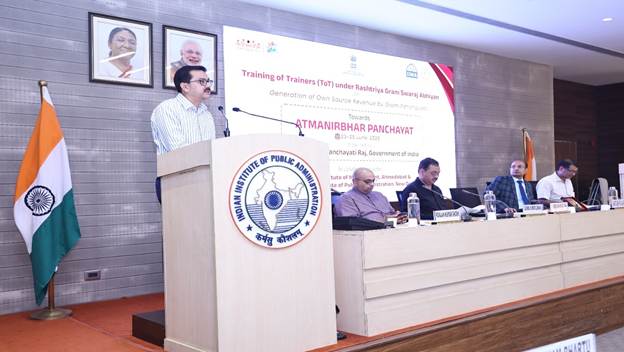
- 27 Jun 2025
In News:
In a significant move to strengthen grassroots governance and fiscal autonomy, the Ministry of Panchayati Raj (MoPR) has launched a Training of Trainers (ToT)programme in collaboration with the Indian Institute of Management (IIM) Ahmedabad and the Indian Institute of Public Administration (IIPA). The initiative aims to enhance the capacity of Panchayats to generate Own Source Revenue (OSR) under the Rashtriya Gram Swaraj Abhiyan (RGSA).
Key Objectives:
- Enhance financial self-reliance of Panchayati Raj Institutions (PRIs).
- Build a cadre of Master Trainers equipped to train Panchayat-level functionaries.
- Shift local governance from a compliance-based model to proactive planning, innovation, and community engagement.
- Promote a culture of fiscal accountability, transparency, and efficient public service delivery at the grassroots level.
Core Focus Areas of Training
- Fundamentals of Own Source Revenue (OSR)
- Revenue enhancement strategiestailored to rural contexts
- Behavioural insights in tax collectionand compliance
- Revenue utilization for development and service delivery
- Village-level financial planningand Gram Panchayat Development Plans (GPDPs)
- Innovative financing mechanisms
- Project management and accountability tools
The training emphasized field orientation, peer learning, and evidence-based practices to ensure real-world applicability and long-term impact.
Institutional Reforms and Digital Integration
As part of the broader reform agenda:
- Model OSR Rules Framework is under development based on state-level legislative reviews.
- A Digital Tax Collection Portal is being created to facilitate:
- Simplified and accountable revenue collection,
- Digital integration with Panchayat-level financial systems.
Case Studies & Best Practices
The training showcased successful Panchayat-level revenue generation models from:Odisha, Gujarat, Goa, Uttar Pradesh, Maharashtra, and the Andaman & Nicobar Islands, highlighting scalable models of local innovation.
Rashtriya Gram Swaraj Abhiyan (RGSA): Background
A Centrally Sponsored Scheme (CSS) launched in 2018 and revamped for 2022–2026, aimed at developing and strengthening the Panchayati Raj System across rural India.
Key Objectives:
- Build governance capacity of PRIs to achieve Sustainable Development Goals (SDGs).
- Empower Panchayat representatives for effective leadership and participatory governance.
- Enhance OSR generation and financial planning at the Panchayat level.
- Promote inclusive development and convergence of schemes.
- Strengthen Gram Sabhas as platforms for citizen engagement.
Salient Features:
- Emphasis on capacity-building and leadership training.
- Promotes decentralisation and compliance with the PESA Act, 1996.
- Encourages use of technology-driven solutions for governance.
- Recognises and incentiviseshigh-performing Panchayats.
- Facilitates collaboration with international and national institutions.
Ambubachi Mela 2025
- 27 Jun 2025
In News:
Thousands of devotees have congregated at the Kamakhya Temple in Guwahati, Assam, to participate in the annual Ambubachi Mela—one of the largest and most significant religious gatherings in Northeast India.
About Ambubachi Mela
- Timing: Celebrated annually during the monsoon season, typically in June.
- Location: Held at the Kamakhya Temple, situated atop Nilachal Hill in Guwahati, Assam.
- Religious Significance:
- Marks the menstrual cycle of Goddess Kamakhya, symbolising the fertility of Mother Earth.
- During this period, the sanctum sanctorum is closed for three days, after which it is ceremonially reopened for darshan.
- Cultural Symbolism:
- Reflects ancient beliefs that associate the Earth with feminine fertility.
- The word ‘Ambubachi’ translates to ‘water flowing’, indicative of both the monsoon rains and the goddess’s fertility.
Kamakhya Temple: Key Facts
- Spiritual Importance:
- Dedicated to Goddess Kamakhya, an incarnation of Shakti.
- Considered one of the most revered sites of Tantric Shaktism in India.
- Recognised as one of the 51 Shakti Peethas, where the yoni (womb) of Sati is believed to have fallen.
- Geographical Location:Located on Nilachal Hill, overlooking the southern bank of the Brahmaputra River.
Architectural Features of Kamakhya Temple
- Architectural Style:
- Combines traditional Nagara style with Saracenic (Mughal) architectural elements, known as the Nilachala Style of Architecture.
- Temple Layout:
- Only temple in Assam with a fully developed ground plan.
- Comprises five main sections:
- Garbhagriha (sanctum sanctorum)
- Antarala (vestibule)
- Jaganmohan (assembly hall)
- Bhogmandir (offering hall)
- Natmandir (performance hall)
- Distinctive Structural Elements:
- Main dome: Modified Saracenic style.
- Antarala: Features a two-roofed structure.
- Bhogmandir: Crowned with five domes, echoing the central shrine.
- Natmandir: Designed with a shell-shaped roof and apsidal end, similar to the namghars (prayer halls) of Assam.
SDG Index 2025
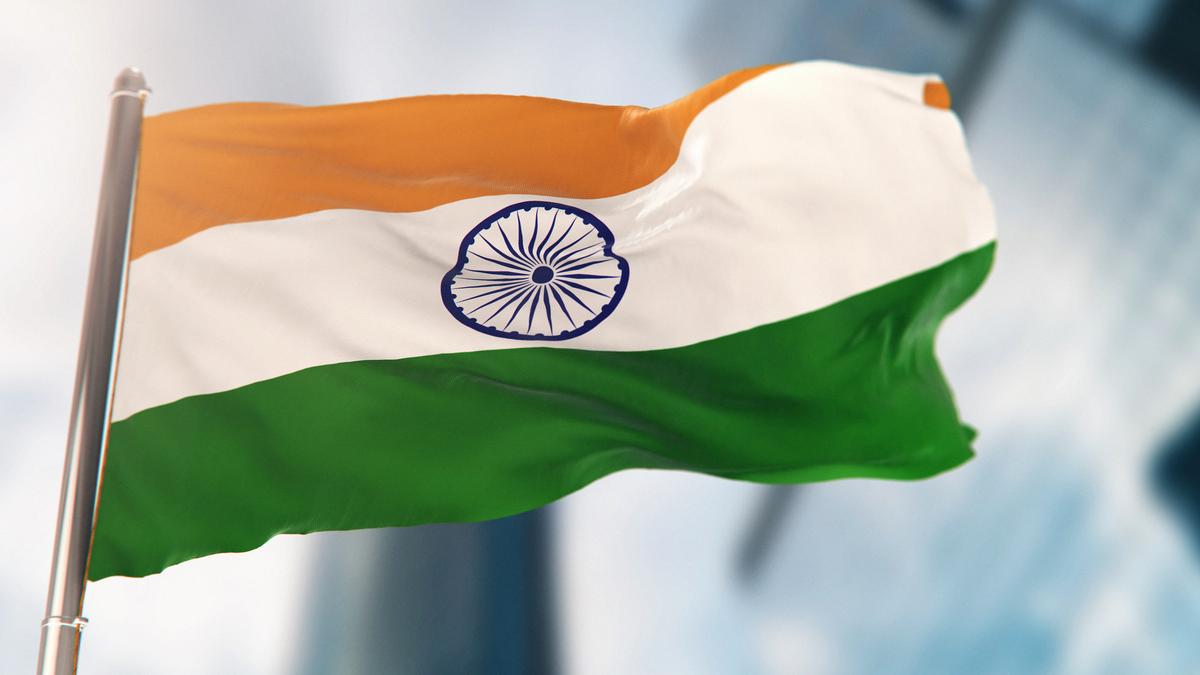
- 27 Jun 2025
In News:
India has ranked 99th out of 193 countries in the Sustainable Development Goals (SDG) Index 2025, marking the first time it has entered the top 100. India scored 67 in the index, as per the Sustainable Development Report 2025 released by the U.N. Sustainable Development Solutions Network.
About the Sustainable Development Report 2025
- Publisher: U.N. Sustainable Development Solutions Network.
- Objective: Tracks annual progress on the 17 Sustainable Development Goals (SDGs) adopted by all UN member states in 2015.
- Coverage: 193 countries.
- Relevance: Assesses national performance across economic, social, and environmental dimensions of sustainability.
Key Highlights of the 2025 Report
Global Trends
- SDG Progress Stalled Globally: Only 17% of the SDG targets are projected to be met by 2030.
- Barriers to Progress: Conflicts, structural vulnerabilities, and constrained fiscal space are key impediments.
- Top Performers:
- Finland ranks 1st, followed by Sweden (2nd) and Denmark (3rd).
- However, many European nations face serious challenges related to climate change and biodiversity loss, due to unsustainable consumption patterns.
Regional Insights
- East and South Asia have shown the fastest progress since 2015, attributed to rapid socioeconomic development.
- India’s Achievement: Ranked 99th, entering the top 100 for the first time.
Sectoral Progress and Setbacks
- Areas of Strong Progress Globally:
- Access to electricity (SDG 7)
- Use of mobile broadband and internet (SDG 9)
- Reduction in child and neonatal mortality (SDG 3)
- Areas of Reversal Since 2015:
- Rising obesity rates (SDG 2)
- Decline in press freedom (SDG 16)
- Poor sustainable nitrogen management (SDG 2)
- Worsening Red List Index (biodiversity loss – SDG 15)
- Weakening Corruption Perceptions Index (SDG 16)
Commitment to Multilateralism
- Top 3 Countries Committed to UN Multilateralism:
- Barbados
- Jamaica
- Trinidad and Tobago
Notable National Rankings
- Brazil (25): Highest among G20 nations.
- Chile (7): Highest among OECD countries.
NAVYA Initiative
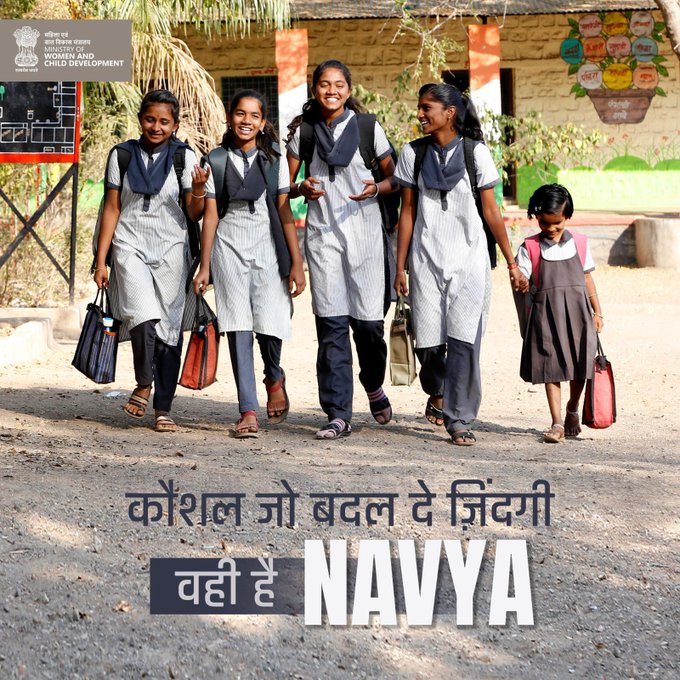
- 26 Jun 2025
In News:
In line with the vision of Viksit Bharat@2047 and the government’s focus on women-led development, the Government of India has launched NAVYA—a pilot initiative aimed at vocationally skilling adolescent girls to empower them with future-ready skills and opportunities.
The programme was officially launched in Sonbhadra, Uttar Pradesh, by the Ministry of Women and Child Development (MWCD) in collaboration with the Ministry of Skill Development and Entrepreneurship (MSDE).
About Nurturing Aspirations through Vocational Training for Young Adolescent Girls (NAVYA):
- Objective:To provide vocational training to adolescent girls aged 16–18 years (with a minimum qualification of Class 10) in non-traditional job roles.
- Target Areas:Implemented as a pilot project in 27 districts across 19 States, including:
- Aspirational districts
- Districts in the North-Eastern States
This reflects the government's commitment to inclusive development and reaching underserved and vulnerable populations.
- Institutional Collaboration:
- Both ministries will formalize convergence to streamline and institutionalize skilling efforts for adolescent girls.
- NAVYA draws upon existing frameworks like the Pradhan Mantri Kaushal Vikas Yojana (PMKVY) and other flagship skill development schemes.
Significance of NAVYA:
Aspect Importance
Empowerment - Enhances skills, confidence, and self-reliance among young girls
Gender Inclusion - Supports women-led development and economic participation
Employment Readiness - Equips girls with job-oriented skills in non-traditional sectors
Regional Equity - Targets backward and underserved regions to reduce disparities
Demographic Dividend - Harnesses the potential of India’s adolescent population in national development
“NAVYA represents a transformative step in ensuring that every adolescent girl becomes a catalyst for change in India’s journey towards an inclusive, skilled, and developed future.”
Rising Evaporative Demand and Thirstwaves
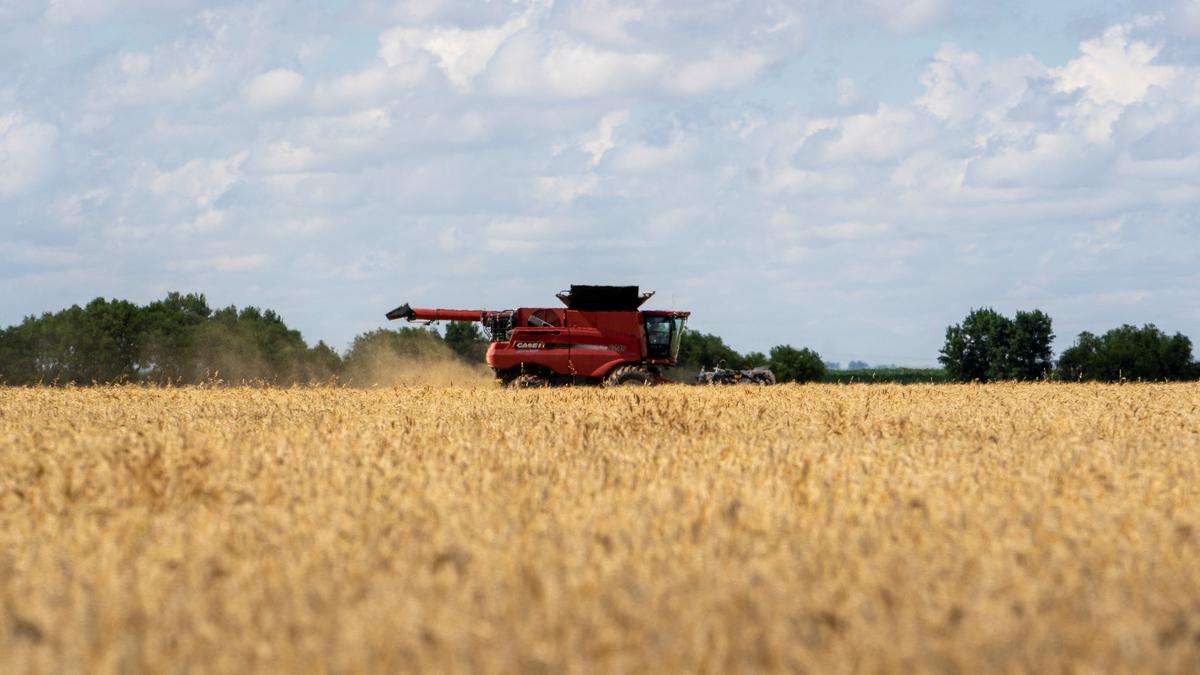
- 26 Jun 2025
In News:
The rising evaporative demand—a measure of how thirsty the atmosphere is—is spotlighting India’s significant data and research gaps related to climate extremes, water stress, and agricultural vulnerability. While global studies are increasingly focusing on "thirstwaves", India lacks adequate research and monitoring frameworks on this critical issue.
What is Evaporative Demand?
- Evaporative demand indicates the near-maximum amount of water that would evaporate from land or vegetation if enough water is available.
- It is not equivalent to actual evaporation, which also depends on water availability.
- Driven by atmospheric factors:
- Temperature
- Wind speed
- Solar radiation
- Humidity
- Cloud cover
High evaporative demand leads to quicker drying of soil and vegetation, increasing drought risk, crop stress, and wildfire susceptibility.
What is a Thirstwave?
- Coined by MeetpalKukal (University of Idaho) and Mike Hobbins (NOAA/University of Colorado).
- Definition: Three or more consecutive days of abnormally high evaporative demand.
- Drivers: Combination of high temperature, low humidity, high solar radiation, and wind speed.
- Impacts:
- Reduces water availability for crops.
- Stresses vegetation.
- Increases fire danger.
- Accelerates drought onset and intensification.
Unlike heatwaves driven by temperature alone, thirstwaves are multi-dimensional and can be more damaging to crops and ecosystems.
Scientific Findings & India-Specific Observations
Global Evidence:
- Kukal& Hobbins’ study (published in Earth’s Future) noted:
- Increased frequency, intensity, and duration of thirstwaves in the U.S.
- Reduced likelihood of zero-thirstwave periods during growing seasons.
India’s Research Gap:
- Chronic shortage of real-time data on evaporative demand and extreme events.
- 1997 Study (Chattopadhyay &Hulme):
- Analyzed 30 years of IMD data.
- Found declining evaporation and potential evapotranspiration, likely due to increased humidity, despite warming.
- Projected future temperature rise would eventually override humidity effects, increasing evaporative demand.
Recent Developments in India:
- IIT Roorkee, NIH & European collaborators (2022):
- Studied 100 river sub-basins.
- Found highest rise in actual evapotranspiration in Northern India, Western Himalayas, and Eastern Himalayan regions.
- Interpreted as signs of increased vegetation or agricultural expansion.
Measurement Techniques:
- Standardised Short-Crop Evapotranspiration:
- A simplified metric to measure water demand of a 12 cm tall, healthy grass under ideal moisture conditions.
- Recommended for crop irrigation planning.
- Rising values signal increasing atmospheric demand and need for adaptive water management.
Implications for India:
- Agriculture and Food Security:
- India’s irrigated crops, especially rice and wheat, are vulnerable to atmospheric water demand.
- Rising thirstwaves threaten to decrease productivity even in well-irrigated regions.
- Water Resource Management:
- Increases soil moisture stress and reduces groundwater recharge.
- Calls for real-time tracking systems for evaporative stress.
- Disaster Preparedness:
- Thirstwaves may precede or exacerbate droughts and wildfires.
- Regions not traditionally drought-prone may still suffer from evaporative shocks.
- Research and Monitoring Needs:
- Lack of indigenous data on thirstwaves.
- Current efforts:Ongoing Indo-U.S. collaboration (University of Idaho & NIT Jalandhar) aims to map South Asian thirstwaves under the Water Advanced Research and Innovation Program.
Way Forward:
- Integrate evaporative demand and thirstwave parameters into IMD's early warning systems.
- Promote region-specific studies on crop sensitivity to evaporative demand.
- Develop adaptive irrigation protocols based on short-crop evapotranspiration trends.
- Sensitise farmers, water managers, and policymakers on atmospheric water demand risks.
- Invest in climate-resilient agriculture and data-driven water governance.
UK’s Terminally Ill Adults (End of Life) Bill

- 26 Jun 2025
In News:
In a landmark decision, the UK House of Commons has passed the Terminally Ill Adults (End of Life) Bill, which seeks to legaliseassisted dying for terminally ill individuals in England and Wales. The Bill passed with a narrow margin of 314 to 291 votes, and will now proceed to the House of Lords for further deliberation.
Key Provisions of the Bill:
- Applicability: England and Wales.
- Eligibility: Only for patients diagnosed with less than six months to live.
- Safeguards:
- The patient must be mentally competent.
- Approval is required from two doctors, a psychiatrist, a senior lawyer, and a social worker.
- The process ensures the patient’s choice is informed and voluntary.
Understanding Euthanasia:
- Etymology: From Greek “eu” (good) + “thanatos” (death) = “good death”.
- Definition: Intentional act of ending a person’s life to relieve suffering from terminal illness or unbearable pain.
Types of Euthanasia:
Type Description Example
Active Deliberate action to end life Lethal injection
Passive Withdrawal of treatment Removing life support
Voluntary With patient’s consent Terminally ill requesting euthanasia
Involuntary Without consent Considered illegal
Ethical Dimensions:
Arguments in favour
- Right to Autonomy: Upholds personal freedom in deciding life and death.
- Compassionate Exit: Eases intractable suffering.
- Dignity in Death: Ensures control over one’s final moments.
- Relief for Families: Reduces emotional and financial strain.
- Medical Resource Optimization: Redirects care to patients with curable conditions.
Arguments Against
- Sanctity of Life: Human life is sacred and must not be intentionally ended.
- Risk of Coercion: Vulnerable groups may be pressured into opting for death.
- Existence of Palliative Alternatives: Modern hospice care offers non-lethal relief.
- Slippery Slope: May lead to misuse or extension to non-terminal cases.
- Erosion of Medical Ethics: Challenges the healer role of doctors.
Indian Legal Perspective:
India has grappled with the euthanasia debate in various judicial pronouncements:
- Gian Kaur v. State of Punjab (1996): Right to die not included under Article 21.
- Aruna Shanbaug Case (2011): Allowed passive euthanasia under strict conditions.
- Common Cause v. Union of India (2018):Recognised the right to die with dignity and permitted Advance Medical Directives.
UNEP’s NDC Cooling Guidelines 2025
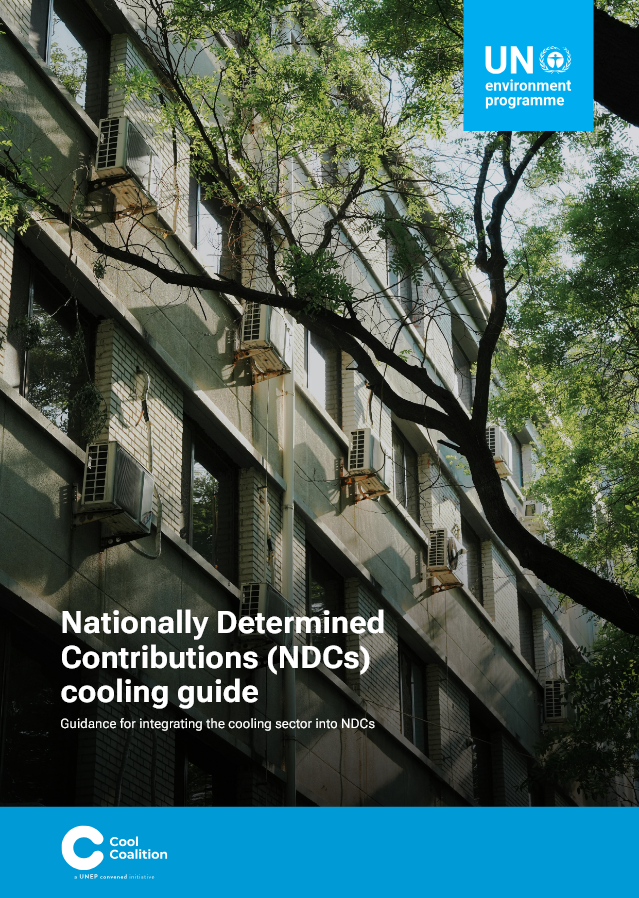
- 26 Jun 2025
In News:
The United Nations Environment Programme (UNEP) has released the NDC Cooling Guidelines 2025, aimed at supporting countries in integrating sustainable cooling strategies into their Nationally Determined Contributions (NDCs) under the Paris Agreement. The initiative addresses both climate mitigation and adaptation challenges posed by rising global temperatures and energy demand.
About the NDC Cooling Guidelines 2025
- Purpose:Provides a structured global framework for countries to incorporate sustainable cooling into national climate action plans, balancing mitigation, adaptation, and developmental needs.
- Developed by:UNEP’s Cool Coalition NDC Working Group, in collaboration with partners like UNDP.
- Primary Objectives:
- Mainstream sustainable cooling in national NDCs.
- Reduce sectoral emissions by 60% by 2050.
- Improve access to cooling for 1.1 billion vulnerable people.
- Establish robust Monitoring, Reporting, and Verification (MRV) mechanisms.
- Align with the Kigali Amendment to the Montreal Protocol and the Global Cooling Pledge.
Global Cooling Landscape: Key Data Points
- Current Impact:
- Cooling accounts for nearly 7% of global GHG emissions, projected to exceed 10% by 2050.
- Cooling consumes 20% of global building electricity, and up to 50% in countries like UAE.
- Access Challenges:1.1 billion people worldwide lack access to efficient and affordable cooling, threatening lives, food security, and healthcare.
- Efficiency Potential:By doubling appliance efficiency, access can expand sixfold without proportionate emission growth.
Challenges in the Cooling Sector
- Rising Emissions:Without immediate policy interventions, emissions from cooling are expected to double by mid-century, increasing climate and energy pressures.
- Access Inequality:Many low-income and rural populations remain exposed to extreme heat due to lack of sustainable cooling.
- Policy Gaps:Only 27% of updated NDCs currently include specific energy efficiency targets related to cooling.
- Gendered Impacts:Women, especially in vulnerable communities, face greater health risks from inadequate cooling and heat stress.
- Reinforcing Heat-Cooling Loop:Increasing temperatures escalate cooling demand, which if met with inefficient systems, leads to more emissions, exacerbating global warming—a vicious cycle.
Six-Step Framework in the Guidelines
- Baseline Assessment:Measure current energy use and refrigerant emissions in the cooling sector.
- Target Setting:Define clear, time-bound targets aligned with national climate priorities.
- Monitoring, Reporting, Verification (MRV):Develop transparent systems to track and report progress.
- Policy Tools:
- Introduce Minimum Energy Performance Standards (MEPS)
- Phase down high-GWP refrigerants
- Promote urban greening and passive cooling techniques
- Governance & Institutional Support:Establish cross-sectoral coordination, incorporating gender-sensitive planning.
- Financing & Equity:Mobilize investments and develop policies to enable equitable access to sustainable cooling technologies.
Country-Level Initiatives
- Nigeria:Integrated National Cooling Action Plan (NCAP) into its NDC, with a focus on heat-resilient rural infrastructure.
- United Arab Emirates (UAE):Adopted district cooling systems and high-efficiency air conditioning in its updated climate roadmap (NDC 3.0).
- Grenada:Committed to becoming the first HFC-free nation, aiming for complete refrigerant phase-down.
INS Nilgiri
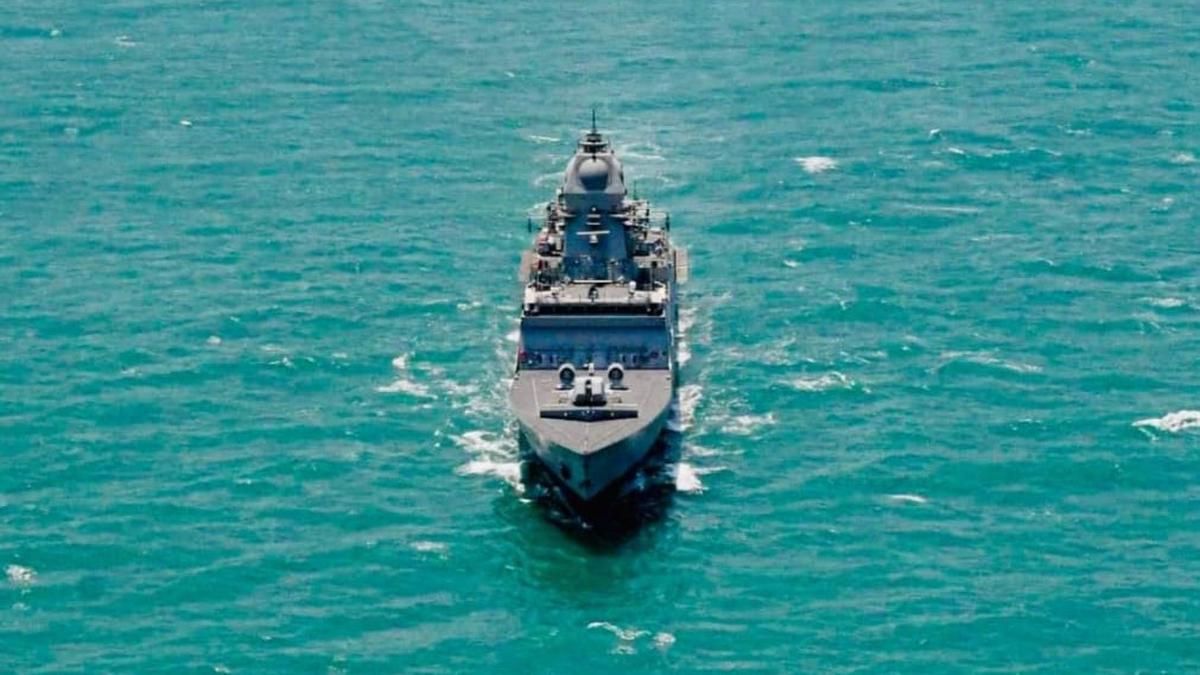
- 26 Jun 2025
In News:
INS Nilgiri, the first stealth frigate of the indigenously developed Project 17A series, has recently been inducted into the Eastern Naval Command. It will play a crucial role in the Eastern Sword-Sunrise Fleet.
Key Facts:
- Class and Design:INS Nilgiri belongs to the Nilgiri-class frigates under Project 17A, an advanced stealth warship initiative. It is an improved version of the earlier Shivalik-class (Project 17) frigates.
- Design and Construction:The vessel has been designed by the Indian Navy’s Warship Design Bureau and constructed by Mazagon Dock Shipbuilders Limited (MDL) in Mumbai.
- Sister Ships Under Construction:Six other frigates of the same class—Himgiri, Taragiri, Udaygiri, Dunagiri, Vindhyagiri, and Mahendragiri—are currently being built at MDL, Mumbai and Garden Reach Shipbuilders and Engineers (GRSE), Kolkata.
Technical Specifications & Capabilities:
- Dimensions & Displacement:
- Length: 149 meters
- Displacement: Approximately 6,670 tonnes
- Propulsion:
- Equipped with a CODAG (Combined Diesel and Gas) propulsion system
- Maximum speed: Up to 28 knots
- Combat Capability:
- Anti-Air Warfare: Armed with 16 Barak-8 surface-to-air missiles
- Surface Warfare: Equipped with 8 BrahMos supersonic cruise missiles for anti-ship and land-attack roles
- Surveillance & Targeting Systems:
- MF-STAR Radar: Offers 360-degree situational awareness
- 3D AESA Radar: Enables tracking of multiple targets simultaneously
- Nishant Radar: Enhances fire control and targeting precision
- Network-Centric Warfare:The onboard Combat Management System (CMS) seamlessly integrates various sensors and weapons, allowing for coordinated operations with other naval platforms.
Significance:
The induction of INS Nilgiri marks a major milestone in India’s pursuit of a modern, self-reliant naval fleet. It enhances the Indian Navy’s blue-water capabilities, contributing to maritime dominance and regional security in the Indo-Pacific.
Index Cards
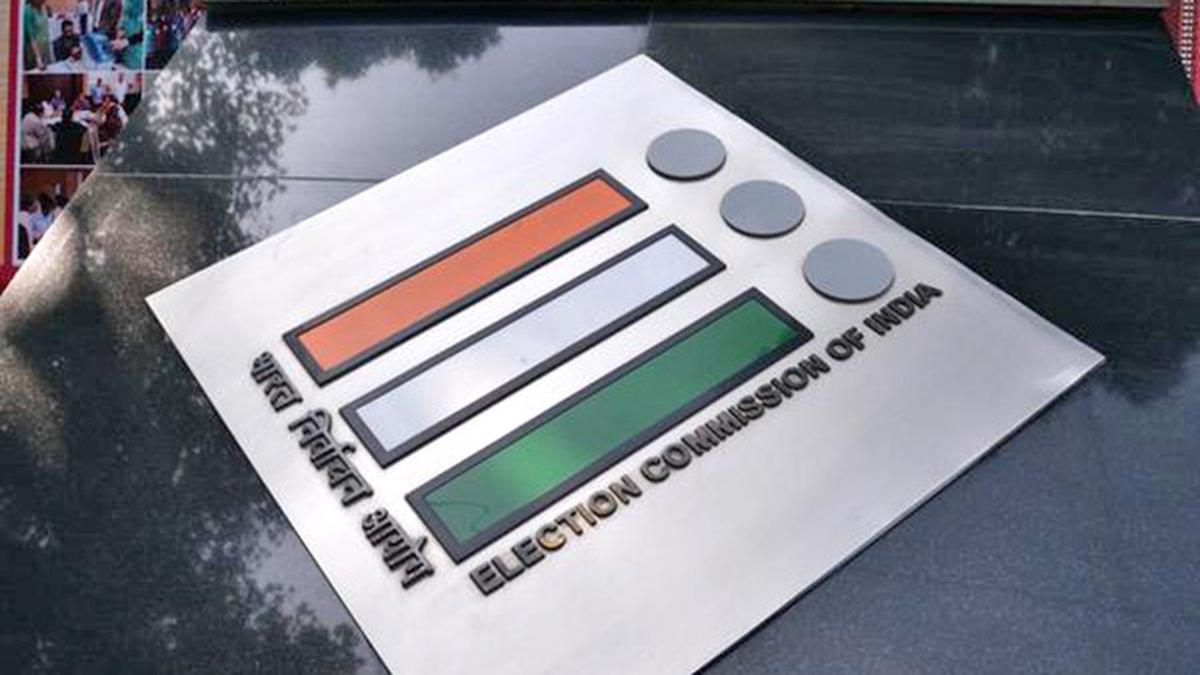
- 09 Jun 2025
In News:
The Election Commission of India (ECI) has recently upgraded the mechanism for generating Index Cards, making it more technology-driven and automated. Index Cards are a non-statutory, post-election statistical reporting format developed suo moto by the ECI to enhance transparency and accessibility of electoral data at the constituency level.
Purpose and Utility
Index Cards are designed to compile and disseminate election-related data for use by:
- Researchers
- Academia
- Journalists
- Policymakers
- The general public
Scope of Information
The Index Cards provide a wide range of data, including:
- Candidate-wise and party-wise vote share
- Electors and votes polled/counted
- Gender-based voting patterns
- Regional variations in voter turnout
- Performance of:
- National and State parties
- Registered Unrecognised Political Parties (RUPPs)
- Participation of women voters
- Winning candidates' analyses
- State/PC/AC-wise elector details and number of polling stations
Technological Upgrade
Earlier, data was manually filled into physical Index Cards at the constituency level using various statutory formats. These were later digitized for statistical reporting, resulting in delays and inefficiencies.
The 2025 upgrade has:
- Replaced the manual system with an automated, data-integrated mechanism
- Ensured faster and more reliable reporting
- Improved the timeliness of data dissemination
Nature of Data
- Index Cards are based on secondary data used exclusively for academic and research purposes.
- Primary and final electoral data is maintained in statutory forms by the respective Returning Officers.
India’s Automotive Industry and Global Value Chains
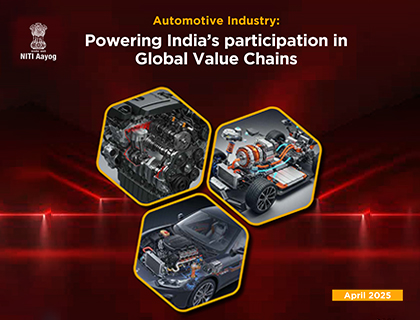
- 14 Apr 2025
In News:
NITI Aayog has recently released a comprehensive report titled “Automotive Industry: Powering India’s Participation in Global Value Chains”. It offers a roadmap to boost India’s role in the global automotive sector by enhancing competitiveness, production capacity, and export potential.
India’s Current Position
India is the world’s fourth-largest automobile producer, with nearly 6 million vehicles manufactured annually. However, its share in the global automotive component trade remains modest at 3%, primarily due to limited penetration in high-precision segments like engine components and drive transmission systems. The country exports auto components worth $20 billion, with major strengths in small cars and utility vehicles.
Global Landscape and Emerging Trends
Globally, 94 million vehicles were produced in 2023, with the automotive components market valued at $2 trillion, of which $700 billion was exported. The industry is witnessing rapid transformation through:
- Electric Vehicles (EVs): Rising demand, regulatory shifts, and battery innovations are reshaping manufacturing.
- Battery Ecosystems: Hubs in Europe and the US are altering global supply chains, focusing on lithium and cobalt.
- Industry 4.0: AI, IoT, robotics, and machine learning are revolutionizing automotive manufacturing through smart factories and digital supply chains.
Challenges to India’s GVC Participation
Despite a strong production base, India faces several hurdles in climbing the Global Value Chain (GVC):
- Low R&D spending and limited innovation
- High operational costs and infrastructural gaps
- Weak IP ecosystem and low brand visibility
- Inadequate skilling and moderate digital adoption
Strategic Interventions Proposed
NITI Aayog recommends a combination of fiscal and non-fiscal measures to address these gaps and strengthen India’s automotive ecosystem.
Fiscal Measures:
- Opex support to scale up production and infrastructure
- Skilling initiatives to build a trained workforce
- R&D incentives and IP transfer support for MSMEs
- Cluster development for shared R&D and testing facilities
Non-Fiscal Measures:
- Promoting Industry 4.0 adoption and quality manufacturing
- Ease of Doing Business reforms in labour, logistics, and regulations
- Global tie-ups and Free Trade Agreements (FTAs) to boost exports
Vision for 2030
By 2030, the report envisions:
- Auto component production to grow from ~$60 billion to $145 billion
- Exports to increase from $20 billion to $60 billion
- GVC share to rise from 3% to 8%
- Trade surplus of around $25 billion
- Employment generation of 2–2.5 million additional jobs
Index of Industrial Production (IIP)
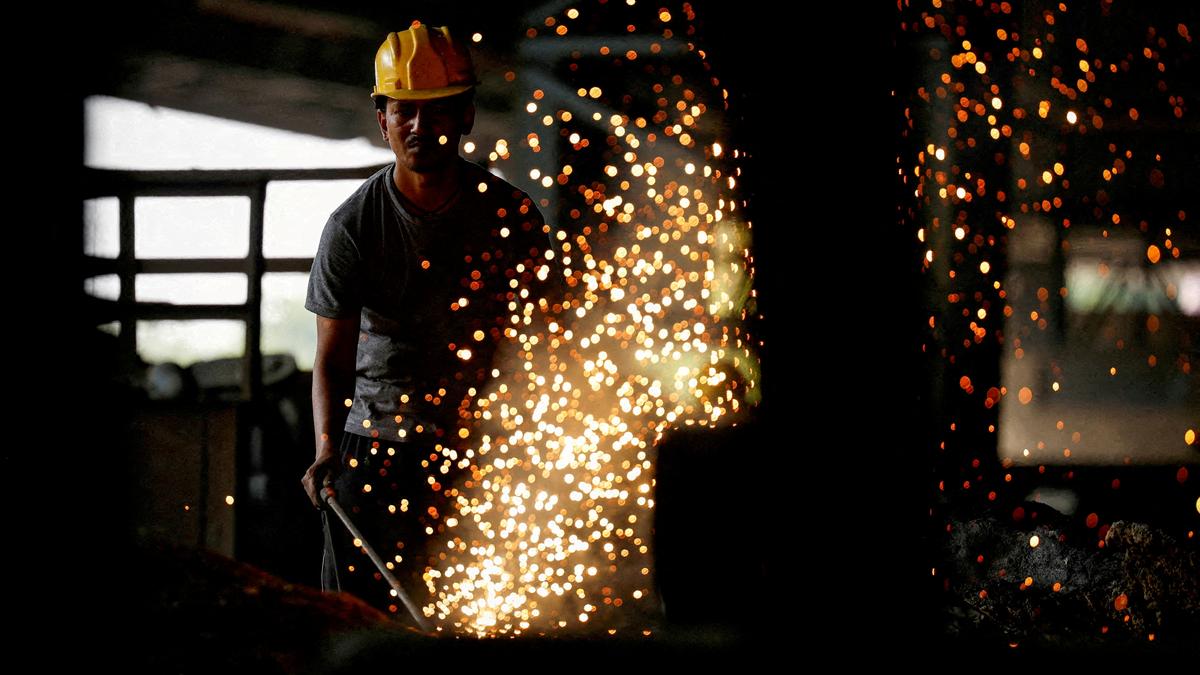
- 14 Apr 2025
In News:
The Index of Industrial Production (IIP), a key barometer of industrial activity in India, registered a growth of just 2.9% in February 2025, the slowest pace in six months. This was below market expectations of around 4% and reflects broad-based slowdown across sectors.
About the IIP
- Published by: Central Statistics Office (CSO), Ministry of Statistics and Programme Implementation (MoSPI)
- Base Year: 2011–12
- Purpose: Measures the short-term changes in volume of production in industrial sectors.
Sectoral Composition and Weights
Sector Weight in IIP No. of Items
Manufacturing 77.63% 809
Mining 14.37% 29
Electricity 7.99% 1
Sector-wise Performance (YoY in February 2025)
Sector Feb 2025 Growth Feb 2024 Growth
Mining 1.6% 8.1%
Manufacturing 2.9% 4.9%
Electricity 3.6% 7.6%
Use-Based Classification Performance
Category Feb 2025 Growth Feb 2024 Growth
Capital Goods 8.2% 1.7%
Intermediate Goods 1.5% —
Consumer Non-Durables -2.1% -3.2%
Observation: Capital goods were the only category to show robust growth. All other segments registered deceleration.
Eight Core Industries (Weight in IIP: 40.27%)
In decreasing order of weight:
- Refinery Products
- Electricity
- Steel
- Coal
- Crude Oil
- Natural Gas
- Cement
- Fertilisers
Key Concerns Highlighted
- Slowing growth across mining, manufacturing, and electricity sectors
- A high base effect from the previous year
- A decline in month-on-month output after five months of sustained growth
- Consumer non-durables in continued contraction, indicating weak rural/household demand
Amrit Bharat Scheme
- 14 Apr 2025
In News:
The Amrit Bharat Station Scheme (ABSS), launched to transform railway stations across India into world-class travel hubs, has achieved a key milestone. Railway Minister Ashwini Vaishnaw announced the completion of redevelopment work at 104 stations out of the planned 1,300 stations under the scheme.
About the Amrit Bharat Station Scheme
- Launched: 2023
- Objective: Comprehensive redevelopment of railway stations to:
- Upgrade passenger amenities
- Enhance multi-modal connectivity
- Modernize infrastructure with sustainable and accessible design
Key Updates (As of April 2025)
- Total stations under ABSS: 1,300
- Stations with completed redevelopment: 104
- Stations in Maharashtra: 132 (significant progress reported)
Major Highlights
Feature Details
Notable Station Project Chhatrapati Shivaji Maharaj Terminus (CSMT), Mumbai
CSMT Redevelopment Cost ?1,800 crore
Modern Facilities Planned Waiting lounges, food courts, clean restrooms, lifts, escalators,
digital signage
International Comparison CSMT post-redevelopment projected to surpass
London’s Kings Cross station
Additional Infrastructure Developments in Maharashtra
- Gondia–Ballarshah Railway Line Doubling:
- Length: 240 km
- Region: Vidarbha
- Approved Investment: ?4,819 crore
- Strategic Importance: Enhances connectivity and freight movement
Centre–State Collaboration
- A Memorandum of Understanding (MoU) was signed between the Government of India and Government of Maharashtra for railway project implementation and coordination.
Beijing+30 India Report

- 14 Apr 2025
In News:
India’s official submission on the Beijing+30 Report marks three decades since the Beijing Declaration and Platform for Action (1995), a landmark framework advancing gender equality across 12 key areas such as education, health, economy, and political participation.
While the report acknowledges past progress—including enactment of laws like the Domestic Violence Act (2005) and the POSH Act (2013)—it lacks an integrated climate-gender perspective, an urgent gap given rising climate vulnerabilities affecting women disproportionately.
Climate Change and Gender Inequality: A Dual Challenge
- Rural women, particularly in agrarian and forest-dependent regions, face acute consequences of climate change—loss of livelihood, food insecurity, and health risks.
- India’s rural women often bear the brunt of extreme weather events, droughts, and resource scarcity.
- According to reports:
- 33% loss of income occurs due to climate-induced productivity disruption, especially from non-farm sources.
- Women perform over 8 hours of daily work, of which 71% is unpaid.
- By 2050, unpaid care work is projected to rise to 8.3 hours/day without mitigation.
Key Data and Impacts
Indicator Insight
Pregnant women (India) 50%+ are anaemic; worsened by food insecurity
Temperature–Violence Link +1°C rise → 8% rise in physical violence, 7.3% rise in sexual violence
Climate policies (FAO) Only 6% mention women; 1% mention poor people
Agriculture Potential Closing gender gap in agri-inputs could raise yields by 20–30%
Women as Agents of Climate Resilience
- Women contribute to 50% of global food production and lead community efforts in seed preservation, sustainable farming, and disaster response.
- Indigenous and rural women prioritize livelihood security (Mahua), safety (Mao), and managing migration—termed the three M's.
- Informal women’s collectives are key in disaster resilience, ecosystem protection, and productivity gains.
Recommendations for Climate-Gender Integration
- Policy Interventions:
- Introduce gender-responsive climate budgeting to prevent greenwashing and ensure equitable allocation.
- Incorporate gender in NAPCC, SAPCC, and ensure percolation to local governance and disaster planning.
- Address emerging risks—trafficking, migration, health, and geriatric safety in disaster zones.
- Data and Monitoring:
- Establish indicators and research on gendered climate impacts.
- Conduct inclusive climate consultations to enable community-driven planning.
- Private Sector & Green Finance:
- Encourage women-led green enterprises, climate-resilient technologies, and inclusive innovations.
- Allocate climate adaptation funds to skill-building, non-farm livelihoods, and local resilience-building.
- Partnership Model:
- Promote collaboration between government, civil society, research institutions, private sector, and international organisations.
- Foster knowledge exchange, capacity building, and public recognition of women climate leaders.
Neutrino Mass and the KATRIN Experiment
- 14 Apr 2025
In News:
The KATRIN experiment nearly halved the maximum possible mass for the subatomic particles.
What are Neutrinos?
- Neutrinos are electrically neutral fundamental particles under the Standard Model of particle physics.
- They are produced in natural processes such as radioactive decay and nuclear reactions in stars and the Sun.
- Notably, they interact very weakly with matter and possess extremely small mass — less than a millionth the mass of an electron.
- Their exact mass is still not directly known, making them a key area of research in modern physics.
The KATRIN Experiment
- Full Form: Karlsruhe Tritium Neutrino Experiment
- Location: Karlsruhe Institute of Technology, Germany
- Objective: To determine the mass of the electron antineutrino, a type of neutrino released during beta decay of tritium.
- Method: By observing the energy spectrum of electrons emitted from tritium decay, scientists infer the mass of the associated neutrino — since more massive neutrinos carry away more energy.
Latest Findings (2025)
- KATRIN has now lowered the upper limit of the neutrino mass to less than 0.45 electron volts (eV).
- This marks a ~50% improvement from its previous estimate, demonstrating enhanced precision in measurements.
- The conclusion was drawn from analysis of 36 million electrons emitted during tritium decay.
DRDO’s Long-Range Glide Bomb (LRGB) ‘Gaurav’

- 13 Apr 2025
In News:
The Defence Research and Development Organisation (DRDO) successfully conducted release trials of the indigenously developed Long-Range Glide Bomb (LRGB) ‘Gaurav’ from a Su-30 MKI aircraft.
About LRGB ‘Gaurav’
- Type: Air-launched, precision-guided munition.
- Purpose: Designed for accurate strikes on land targets from stand-off distances, i.e., beyond enemy air defence range.
- Indigenously developed by DRDO under the Ministry of Defence.
Key Features
- Range:
- Demonstrated precision strike at nearly 100 km.
- Operational range: 30–150 km.
- Variants by Weight:
- Gaurav (winged): 1,000 kg
- Gautham (non-winged): 550 kg
- Guidance Systems:
- Inertial Navigation System (INS)
- Satellite-based navigation (e.g., GPS/IRNSS)
- Digital control for enhanced accuracy
Significance
- Boosts India’s precision strike capability.
- Promotes self-reliance in defence technology under the Atmanirbhar Bharat initiative.
Related Concepts
Glide Bomb:
- A precision-guided munition that travels significant distances without powered propulsion.
- Uses aerodynamic lift to glide toward the target.
- Navigation via INS, GPS, or laser guidance.
Su-30 MKI Aircraft:
- A twin-engine, multirole fighter aircraft.
- Developed jointly by Sukhoi Design Bureau (Russia) and Hindustan Aeronautics Limited (HAL).
- Backbone of the Indian Air Force (IAF) combat fleet.
Legionnaires’ Disease
- 13 Apr 2025
In News:
Health authorities in New South Wales (NSW), Australia, have issued a public alert after a spike in Legionnaires’ disease cases in Sydney. The outbreak is suspected to be linked to contaminated air-conditioning systems in the city.
About Legionnaires’ Disease
Aspect Details
Cause Legionella bacteria, found in freshwater and man-made water systems
Type A severe form of pneumonia
Related Disease Pontiac fever – a milder, flu-like respiratory illness caused by the same bacteria
Key Features
- Symptoms:
- High fever, cough, shortness of breath
- Muscle pain, headaches, confusion
- Diarrhoea or nausea in some cases
- Transmission:
- Not person-to-person
- Spread through inhalation of contaminated aerosols (e.g., from cooling towers, air conditioners, hot tubs)
- Risk Factors:
- Elderly individuals
- Smokers
- People with weakened immune systems or chronic lung conditions
Treatment and Prevention
- Treatment: Requires antibiotic therapy
- Vaccine: No vaccine currently available
- Prevention:
- Regular maintenance and disinfection of water systems
- Monitoring air-conditioning and cooling systems
Indian Giant Flying Squirrel
- 13 Apr 2025
In News:
A rare sighting of the Indian Giant Flying Squirrel (Petauristaphilippensis) has been reported in Ranikhet, a hill station in Uttarakhand, highlighting the ecological richness of the region.
About Indian Giant Flying Squirrel
Feature Description
Scientific Name Petauristaphilippensis
Size Body length: 30–45 cm; Tail length: up to 60 cm
Appearance Rufous coat, grey underparts, large eyes, and a gliding membrane from wrist
to ankle
Locomotion Glides up to 60 meters between trees using patagium (gliding membrane)
Habitat and Distribution
- Found in tropical and subtropical forests across central and southern India
- Inhabits evergreen, semi-evergreen, and deciduous forests, especially near forest edges
- Recent sighting in Uttarakhand indicates possible range expansion or overlooked presence
Ecological Role
- Diet: Fruits, nuts, leaves, and bark
- Acts as a seed disperser, supporting forest regeneration
- Considered a keystone species due to its ecological significance
Behavioural Traits
- Nocturnal and arboreal
- Emits alarm calls upon detecting predators like owls
- Active at night, gliding from tree to tree in search of food
Conservation Status
Category Status
IUCN Red List (Global) Least Concern
IUCN Status (India) Near Threatened (due to habitat loss)
Wildlife Protection Act, 1972 Schedule II
Threats
- Habitat loss and fragmentation
- Deforestation and degradation of forest corridors
- Increasing human encroachment in forested landscapes
Kerala Researchers win International Grant for Hornbill Conservation
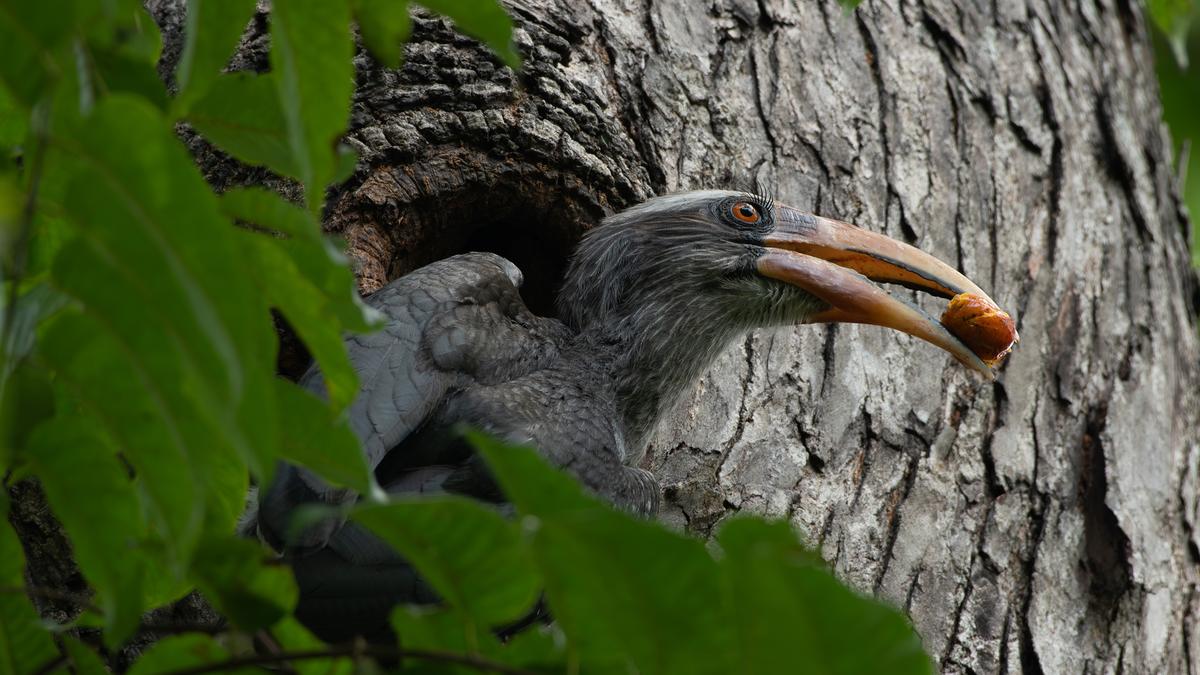
- 13 Apr 2025
In News:
A team of young researchers from Kerala has won the prestigious Future Conservationist Award by the Conservation Leadership Programme (CLP) for their community-driven project on conserving the Malabar Grey Hornbill in Wayanad.
About Malabar Grey Hornbill (Ocyceros griseus)
- Status: Vulnerable (IUCN Red List)
- Legal Protection: Schedule IV of the Wildlife Protection Act, 1972
- Endemic to: Western Ghatsand parts of the Nilgiris, Wayanad, and Anamalai Hills in Southern India.
- Habitat: Evergreen forests, plantations, and agricultural landscapes
- Ecological Importance: Cavity-nesting frugivore, plays a key role in seed dispersal
- Nesting Behavior:
- Nests in secondary cavities (e.g., old woodpecker hollows)
- Reuses the same nesting cavity for years
- Dependent on cavity-bearing trees, often outside protected areas
About the Future Conservationist Award (CLP)
- Awarded By:
- Fauna & Flora International
- BirdLife International
- Wildlife Conservation Society
- Purpose: Supports early-career conservationists with funding and mentorship
- Focus Areas: Field conservation, community engagement, biodiversity monitoring
Taiwan Strait
- 13 Apr 2025
In News:
China has recently launched aggressive military drills in the Taiwan Strait, heightening tensions in the region and drawing international concern over the stability of the Indo-Pacific.
About Taiwan Strait
- Location: Separates mainland China from the island of Taiwan.
- Connectivity: Links the South China Sea to the East China Sea.
- Width:
- Widest point: ~180 km
- Narrowest point: ~130 km
- Depth: Average of about 70 meters.
- Key Islands: Includes the Pescadores (Penghu) Islands, administered by Taiwan.
- Historical Name: Known as Formosa (meaning “Beautiful”) by Portuguese explorers in the 16th century.
Strategic and Economic Importance
- Maritime Trade Route:Nearly 40% of the world’s container ship traffic passes through the Taiwan Strait annually.
- Fisheries:One of China’s richest fishing zones, home to over 100 economically significant fish species.
Geopolitical and Historical Context
- Post-1949 Divide:Became a de facto boundary after the Nationalist government retreated to Taiwan post-Chinese Civil War.
- Taiwan Strait Crises:First Crisis (1954–55) and Second Crisis (1958) involved artillery attacks by the PRC on ROC-held islands.These crises prompted U.S. military support to Taiwan to prevent escalation.
Why it matters for India and the World
- Rising tensions in the Taiwan Strait could disrupt global trade and impact Indo-Pacific security.
- Strategic for India’s maritime interests and foreign policy under the Act East Policy and Indo-Pacific strategy.
BM-04 Missile
- 12 Apr 2025
In News:
India recently introduced the BM-04, a new-generation Short-Range Ballistic Missile (SRBM), during the Vigyan Vaibhav 2025 defence exhibition in Hyderabad. Developed by the Defence Research and Development Organisation (DRDO), the missile underscores India’s commitment to enhancing its conventional precision strike and counterforce capabilities.
Key Specifications and Features:
- Length: 10.2 metres
- Diameter: 1.2 metres
- Weight: Approximately 11,500 kg
- Propulsion: Dual-stage, solid-fuel system
- Range: Capable of striking targets up to 1,500 km away
- Warhead: Equipped with a 500 kg conventional payload
- Accuracy: Features a 30-metre Circular Error Probability (CEP)
Advanced Capabilities:
- Canisterized Launch System: Like other strategic missiles in India’s arsenal, the BM-04 is canisterized, enabling quicker launch readiness by pre-mating the warhead and delivery system.
- Mobile Deployment: Transported and launched via an indigenous six-wheeled Transport Erector Launcher (TEL), offering enhanced mobility and operational flexibility.
- Hypersonic Glide Body (C-HGB): The missile incorporates a Common Hypersonic Glide Body, allowing it to maneuver mid-flight, making its trajectory less predictable and improving its ability to evade missile defence systems, particularly in contested A2/AD environments.
- Modular Design: The BM-04 platform is designed for upgradability, supporting integration of advanced warheads, sensors, and propulsion technologies as threat perceptions evolve.
Strategic Significance:The induction of the BM-04 marks a leap in India’s tactical missile capability, bolstering its credible conventional deterrence posture. With precision targeting, improved survivability, and adaptability for future upgrades, the BM-04 is poised to play a vital role in India’s defence architecture.
Indian Star Tortoise
- 12 Apr 2025
In News:
In a significant conservation achievement under the Turtle Rehabilitation Project (TRP), 340 Indian Star Tortoises were successfully released into the wild at Jogapur Reserve Forest, located in Chandrapur district, Maharashtra.
Indian Star Tortoise (Geochelone elegans)
- IUCN Status:Vulnerable
- CITES Listing:Appendix I
- Protection under Indian Law:Schedule I, Wildlife (Protection) Act, 1972
Habitat & Range:
- Native to Northwest India, Southern India, and Sri Lanka
- Prefers arid and semi-arid ecosystems including scrublands, dry forests, grasslands, and semi-deserts
Key Characteristics:
- Recognizable by the radiating star-like patterns on its domed shell
- Faces high poaching pressure due to demand in the illegal exotic pet trade
- Exhibits crepuscular behavior (most active during dawn and dusk)
- Primarily herbivorous, consuming grasses, flowers, and leafy vegetation
Turtle Rehabilitation Project (TRP): A Conservation Initiative
- Launched: Late 2024; witnessed a major release event in April 2025
- Implemented By: Maharashtra Forest Department in collaboration with RESQ Charitable Trust
Objectives:
- Rescue and rehabilitate illegally trafficked tortoises and turtles
- Facilitate safe reintroduction into natural habitats through:
- Medical treatment
- Acclimatization to wild conditions
- Biometric tracking for post-release monitoring
- Raise public awareness via community engagement and school outreach
NaBFIDsigns strategic MoU with New Development Bank (NDB)
- 12 Apr 2025
In News:
The National Bank for Financing Infrastructure and Development (NaBFID) has entered into a strategic Memorandum of Understanding (MoU) with the New Development Bank (NDB) to strengthen cooperation in long-term infrastructure financing and promote clean energy development in India.
About NaBFID (National Bank for Financing Infrastructure and Development)
- Type: Development Finance Institution (DFI)
- Established Under:NaBFID Act, 2021
- Regulated By: Reserve Bank of India (RBI) as an All-India Financial Institution (AIFI)
Objectives:
- Bridge the gap in long-term, non-recourse infrastructure finance
- Support the development of India’s bond and derivatives markets
- Foster sustainable economic growth
- Enable project financing in clean energy, transport, and water infrastructure
Key Features:
- Capital base to be scaled up to ?1 trillion
- Focuses on medium to long-term financing (1–5+ years)
- Promotes Public-Private Partnerships (PPPs) and financial viability of projects
- Engages in joint research, capacity building, and knowledge-sharing with global institutions like NDB
About the New Development Bank (NDB)
- Type: Multilateral Development Bank formed by BRICS nations (Brazil, Russia, India, China, South Africa)
- Proposed: BRICS Summit, New Delhi (2012)
- Established By:Fortaleza Declaration, 15 July 2014
- Became Operational: 21 July 2015
Mandate:
- Mobilize funds for infrastructure and sustainable development
- Finance projects in emerging and developing economies (EMDCs)
- Promote green, inclusive, and resilient growth, particularly in clean energy, transport, and water sectors
Key Features:
- Authorized Capital: $100 billion
- India’s Contribution: $2 billion (paid in 7 tranches, 2015–2022)
- Engagement in India: As of December 2024, NDB has financed 20 projects worth $4.867 billion
Blue Washing of Polluting Industries
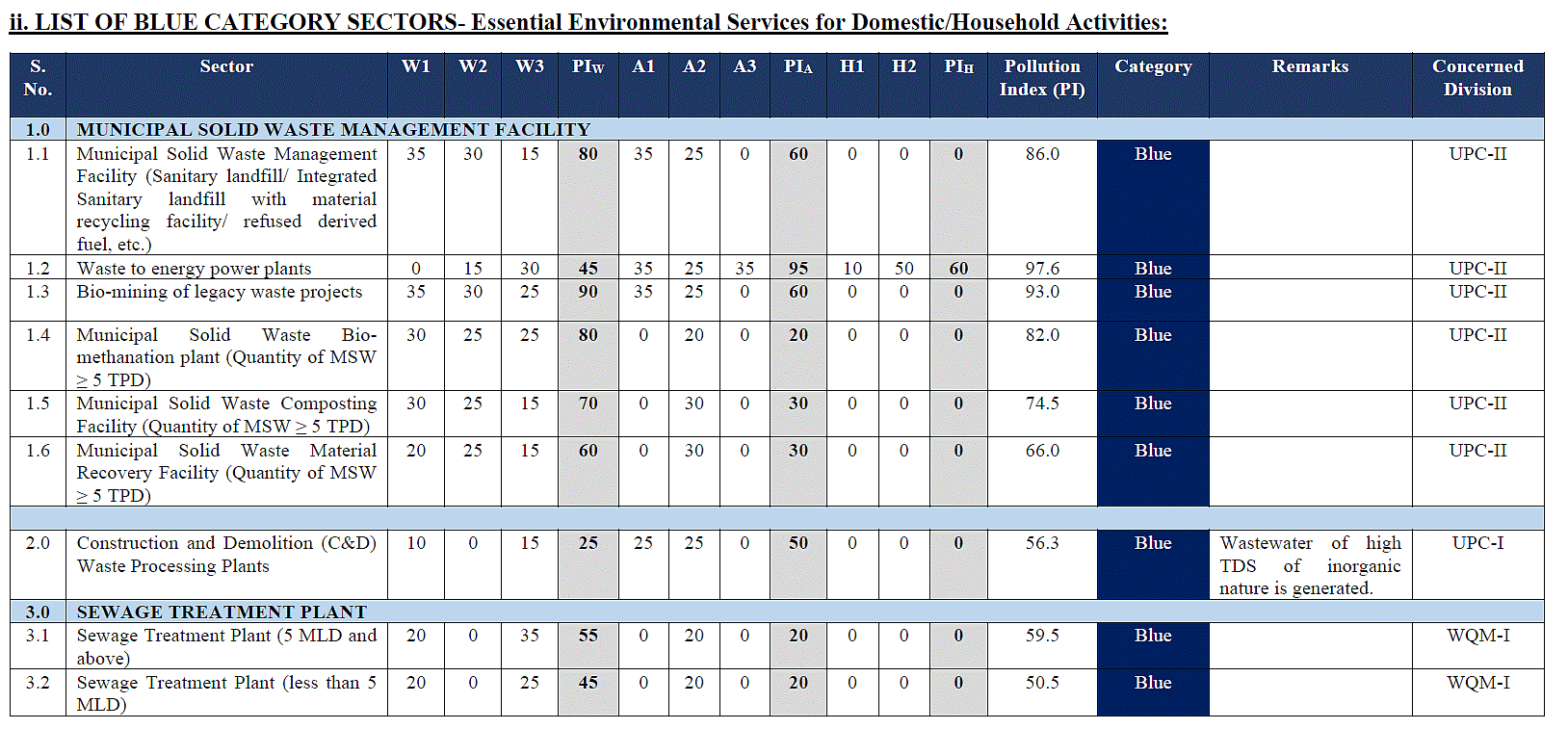
- 12 Apr 2025
In News:
- The Central Pollution Control Board (CPCB) has recently introduced a new ‘Blue Category’ for industries under its Essential Environmental Services (EES) framework.
- Notably, Waste-to-Energy (WTE) incineration plants, previously classified as highly polluting ‘Red Category’ industries, have now been controversially reclassified under this new category.
Background: Pollution Index (PI) and Industry Categorisation
- The Ministry of Environment, Forest and Climate Change (MoEFCC) classifies industries into categories — White, Green, Orange, and Red — based on a Pollution Index (PI) (0–100 scale).
- White (0–20): Least polluting
- Green (21–40)
- Orange (41–59)
- Red (60–100): Most polluting
- WTE plants, with a PI of 97.6, were originally in the Red Category.
What is the new Blue Category?
- Created under Essential Environmental Services (EES) classification.
- Grants 2 additional years of “Consent to Operate” (essentially, consent to pollute).
- Aims to support infrastructure like composting units, biogas plants, material recovery facilities, etc
Controversy: WTE Incineration in the Blue Category
- WTE plants burn unsegregated municipal solid waste (MSW) to generate electricity by producing steam to drive turbines.
- Unlike claimed benefits, WTE plants emit more CO? per unit of electricity than coal-fired plants, contributing to climate change.
- CPCB’s inspection reports found that Delhi’s WTE plants exceeded emission norms, releasing carcinogens and other pollutants such as:
- SOx, NOx, HCL, PM, Dioxins, and Furans
- In FY 2022–23, Delhi’s WTE plants incinerated ~735,840 tons of plastic, contributing significantly to Delhi’s poor air quality.
- These plants also generate hazardous ash, requiring secure landfill disposal.
Issues with Reclassification
- The CPCB’s own guidelines state that:
- Only projects that do not emit hazardous waste or
- Projects that promote the circular economy can be blue-listed.
- However, leading government institute CSIR-NEERI has observed that WTE plants violate the principles of the circular economy and contravene Solid Waste Management Rules, 2016.
- Reclassification undermines environmental safeguards, harms waste pickers’ livelihoods, and imposes financial burdens on Urban Local Bodies (ULBs).
Sunbird

- 12 Apr 2025
In News:
British startup Pulsar Fusion is developing Sunbird, a nuclear fusion-powered rocket that could significantly reduce travel time to outer planets like Mars and Pluto. An orbital demonstration is planned for 2027.
Key Features of Sunbird
- Maximum Speed: Up to 805,000 km/h, surpassing the Parker Solar Probe (692,000 km/h), the fastest human-made object to date.
- Travel Efficiency: Could enable missions to Pluto in just 4 years, and cut travel time to Mars by nearly 50%.
- Payload Capacity: Capable of delivering up to 2,000 kg to Mars in six months.
- Functionality: Unlike chemical rockets like SpaceX’s Starship, Sunbird would act as an interplanetary booster, attaching to spacecraft and possibly operating between charging stations in Low Earth Orbit (LEO) and Mars orbit.
About Nuclear Fusion Propulsion
Nuclear Fusion aims to replicate the process that powers stars — the fusion of atomic nuclei to release energy. Unlike nuclear fission, fusion is cleaner, offers higher energy output, and produces minimal radioactive waste.
Types of Nuclear Propulsion Systems
Propulsion Type Description
Nuclear Thermal Propulsion (NTP) Uses a nuclear reactor to heat liquid hydrogen which
turns to plasma and produces thrust. Provides high exhaust
velocity and can increase payload efficiency 2–3 times
over chemical rockets. Ground tests began in the 1950s.
Nuclear Electric Propulsion (NEP) Converts reactor heat into electricity to power ion thrusters,
which gradually reach high speeds. Components include a
compact reactor core, electric generator, heat rejection
system, and electric propulsion system. Unlike solar power,
nuclear sources ensure consistent energy beyond Mars.
Challenges in Fusion Rocket Development
- Fusion systems are currently large and heavy, posing difficulties in miniaturisation for spaceflight.
- Fusion on Earth is hard to replicate due to atmospheric constraints; space offers a more natural environment for fusion reactions.
Global Efforts and Timeline
Apart from Pulsar Fusion, companies like Helicity Space and General Atomics (backed by NASA and Lockheed Martin) are also advancing fusion-powered space propulsion systems, with testing planned around 2027.
Trends in Maternal Mortality 2000–2023
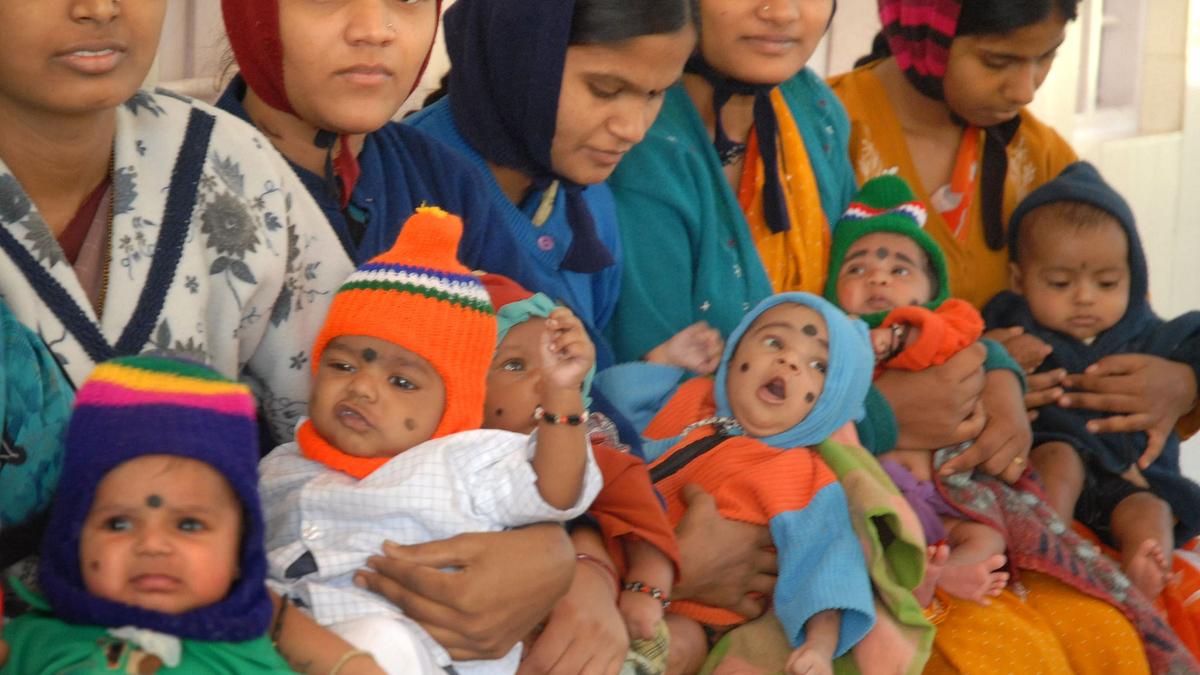
- 11 Apr 2025
In News:
A recent United Nations report titled ‘Trends in Maternal Mortality 2000–2023’, released by the Maternal Mortality Estimation Inter-Agency Group (MMEIG), highlights global progress and setbacks in maternal health. While acknowledging India's significant gains, the report places India second in global maternal deaths, behind Nigeria.
India’s Maternal Mortality Statistics (2023)
- Maternal deaths in India: 19,000(7.2% of global total)
- Rank: Second globally, tied with the Democratic Republic of Congo
- MMR: Reduced from 362 per 1 lakh live births (2000) to 80 in 2023 — a 78% decline
- Global average decline: 40% (2000–2023), but India achieved 86% decline
- Comparison with Nigeria:
- Nigeria: 75,000 deaths, contributing 28.7% of global maternal deaths
- India's Health Ministry deemed the comparison unfair given population differences (India: 145 crore, Nigeria: 23.26 crore)
Definition and Importance of MMR
According to WHO, Maternal Mortality Ratio (MMR) refers to:
“The death of a woman during pregnancy or within 42 days of termination, from pregnancy-related causes excluding accidental ones.”
MMR is a critical indicator for assessing healthcare quality and maternal well-being.
UN Global Findings
- Estimated maternal deaths globally (2023): 260,000
- Daily deaths: Over 700 women; about one death every two minutes
- Leading causes: Post-partum haemorrhage, hypertensive disorders, infections
- SDG 3.1 Target: Reduce MMR to <70 per 1 lakh live births by 2030
India-Specific Causes of Maternal Deaths
- Medical reasons:
- Post-partum haemorrhage
- Hypertensive disorders (e.g. pre-eclampsia)
- Infections related to pregnancy
- Co-morbidities: Anaemia, diabetes, hypertension
- Systemic challenges:
- Inadequate emergency obstetric care at Primary Health Centres (PHCs) and Community Health Centres (CHCs)
- Lack of infrastructure, trained personnel, and referral systems
- Socio-economic backwardness and poor access to healthcare in northern India
Concerns Highlighted in the Report
- Slowing progress post-2016 despite early improvements
- Humanitarian funding cuts impacting:
- Health worker retention
- Facility operations
- Availability of essential drugs (for haemorrhage, malaria, pre-eclampsia)
- Disruption in maternal care supply chains, especially in low-resource regions
India’s Stand
The Union Health Ministry has contested comparisons with smaller nations like Nigeria, asserting that India's maternal health progress is notable given its large population. The Ministry emphasized the 86% decline in MMR since 1990, as opposed to a global decline of 48% in the same period.
Accommodative Stance of Monetary Policy
- 11 Apr 2025
In News:
In its latest Monetary Policy Committee (MPC) meeting, the RBI decided to retain the accommodative stance amid signs of moderating inflation and sluggish economic growth. This was intended to support the ongoing recovery and ensure credit availability in key sectors.
Definition:
An accommodative stance is a monetary policy approach adopted by central banks, such as the Reserve Bank of India (RBI), to stimulate economic activity. It generally involves:
- Keeping interest rates low
- Injecting liquidity into the financial system
This stance signals that the central bank is open to reducing rates further or maintaining low rates for an extended period to support growth and demand.
When is it Adopted?
The RBI typically adopts an accommodative stance during:
- Slowing or below-potential economic growth
- Low or stable inflation within the RBI’s target range
- Need to revive consumption, investment, and employment
- Response to domestic or global financial shocks and uncertainties
Objectives
The main aims of an accommodative stance include:
- Boosting credit flow and private investment
- Encouraging borrowing and spending
- Supporting aggregate demand revival
- Providing liquidity relief to stressed sectors
- Promoting employment generation
Key Monetary Tools Used by RBI
To implement an accommodative stance, the RBI uses several instruments:
- Repo Rate Reduction:
- Lowers the cost of borrowing for commercial banks.
- Encourages banks to lend more to businesses and consumers.
- Open Market Operations (OMOs):RBI buys government securities to infuse liquidity into the market.
- Long-Term Repo Operations (LTROs):Provides long-term funding to banks at low interest rates.
- Cash Reserve Ratio (CRR) Adjustments:Temporarily lowering CRR increases the funds available for lending.
- Moral Suasion & Regulatory Forbearance:RBI encourages banks to maintain or enhance credit flow, especially to priority and stressed sectors.
Arctic Biome: From Carbon Sink to Carbon Source
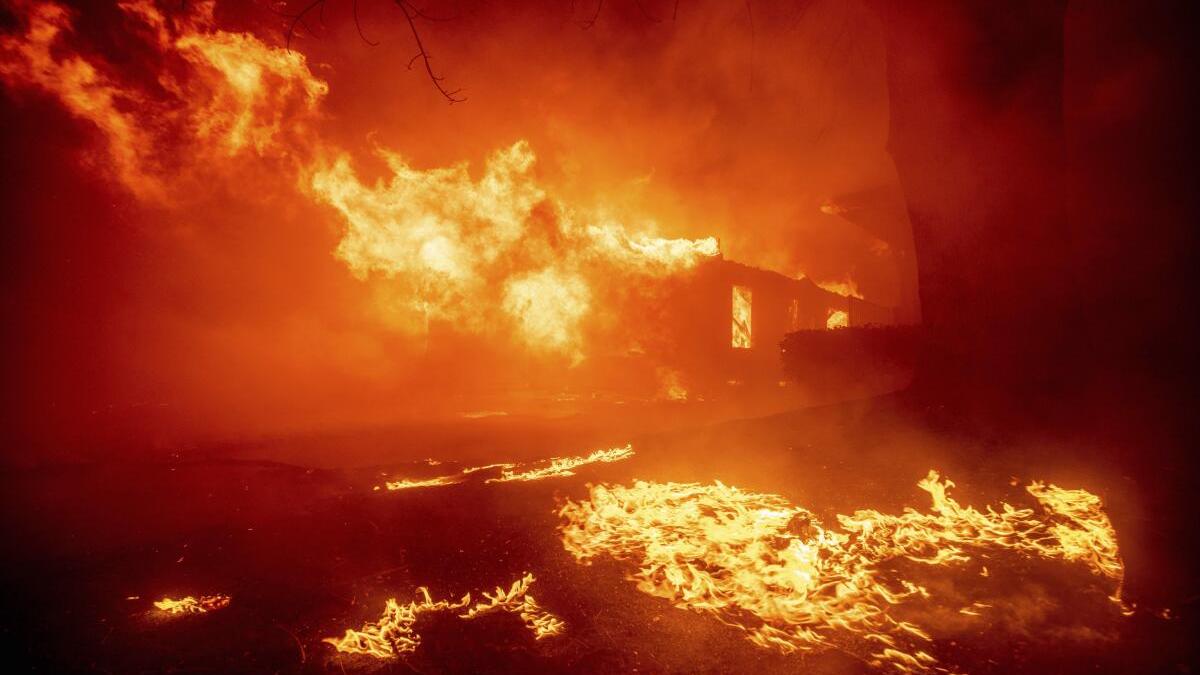
- 11 Apr 2025
Context:
- The Arctic biome, primarily a treeless tundra, spans approximately 11.5 million km² and includes regions in Canada, Greenland, Iceland, and Eurasia.
- It is characterized by permafrost (permanently frozen ground) close to the surface, limiting plant root growth.
- Vegetation consists of grasses, lichens, mosses, and low shrubs, while fauna includes polar bears, arctic foxes, caribou, musk ox, and migratory birds like snow geese.
- Climatic conditions are harsh, with temperatures ranging from -60°C in winter to 15.5°C in summer, and annual precipitation between 150–250 mm, mostly as snow.
- Despite nutrient-poor soils, the biome has functioned as a major carbon sink by storing carbon in peat and humus.
The Arctic Boreal Zone (ABZ) and Carbon Dynamics
The Arctic Boreal Zone (ABZ), which includes tundra, coniferous forests, and wetlands, has historically played a crucial role in global carbon sequestration. Its coniferous forests form the largest land-based biome on Earth.
However, recent studies, including one in Nature Climate Change (2025), indicate that over 30% of the ABZ has shifted from being a carbon sink to a carbon source. This reversal is primarily driven by:
- Permafrost thawing: Warmer topsoil temperatures lead to decomposition of organic matter, releasing CO? and methane.
- Frequent and intense wildfires: These burn organic-rich soils, releasing large volumes of carbon.
This transition creates a positive feedback loop: Wildfires release carbon → global temperatures rise → permafrost thaws → more emissions → more fires.
Fire Trends and Global Impact
Data from the Copernicus Atmosphere Monitoring Service (CAMS) reveal that wildfires released 800,000 tonnes of carbon in January 2025 alone, nearly 4 times more than in the same period a decade ago.
Key wildfire incidents include:
- Texas and Oklahoma (USA): Destroyed 14,000+ structures, burned 16,000 hectares, and displaced thousands.
- Ofunato City (Japan): One of the country’s largest fires in 50 years, affecting nearly 2,900 hectares.
According to the India State of Forest Report (Dec 2024):
- Uttarakhand recorded the highest number of forest fires (5,315 fires) between Nov 2022–June 2023.
- However, fire hotspots are declining: 2.23 lakh (2021–22) → 2.12 lakh (2022–23) → 2.03 lakh (2023–24).
India’s Changing Fire and Climate Profile
Research by IIT Kharagpur and the Indian Institute of Tropical Meteorology shows that land temperatures in northwest, northeast, and central India are rising by:
- 0.1–0.3°C/decade (pre-monsoon)
- 0.2–0.4°C/decade (post-monsoon)
This trend has led to earlier, longer, and slower-moving heatwaves, increasing wildfire vulnerability. India emits an estimated 69 million tonnes of CO? annually from forest fires.
Key Findings from the 2024 Arctic Report Card (NOAA)
The U.S. National Oceanic and Atmospheric Administration (NOAA) confirms that the Arctic tundra is becoming a carbon source, exacerbated by fossil fuel pollution and recurrent wildfires. According to NOAA, this shift reflects persistent, long-term climate trends, not mere variability.
A global study of 200 monitoring sites (1990–2020) found:
- Alaska contributed 44% of the ABZ’s new carbon emissions.
- Northern Europe and Siberia added 25% and 13%, respectively.
- Non-summer months now emit more carbon than the entire summer absorption.
Historical fire events like the 2003 Siberian fires and the 2012 Timmins fire (Canada) significantly accelerated this trend.
M-CADWM Scheme
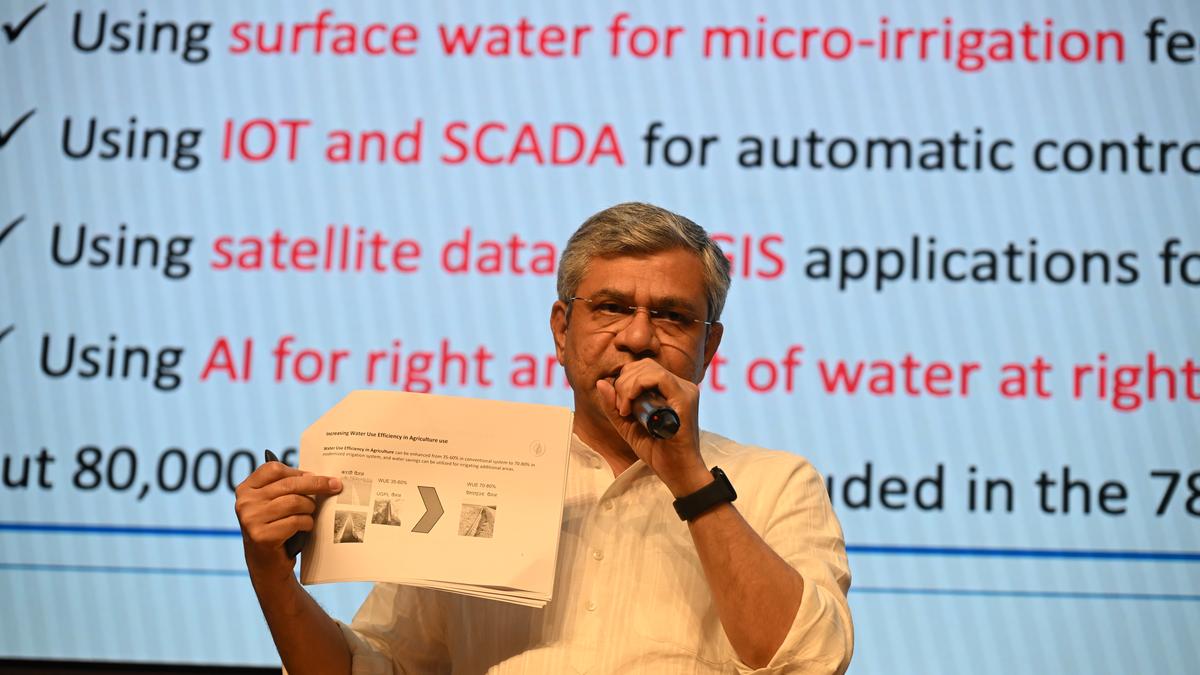
- 11 Apr 2025
In News:
The Union Cabinet has approved the Modernisation of Command Area Development and Water Management (M-CADWM) scheme as a sub-scheme of the Pradhan Mantri Krishi Sinchayee Yojana (PMKSY). The scheme will be implemented during 2025–26 with an initial outlay of ?1,600 crore.
Background
- PMKSY was launched in 2015-16 to expand the cultivable area under assured irrigation, improve on-farm water use efficiency, and enhance access to water at the farm level.
- The Command Area Development and Water Management (CAD&WM)programme was first initiated in 1974-75, and restructured in 2004. It has been implemented under PMKSY - Har Khet Ko Pani since 2015-16.
Objectives of M-CADWM
- Modernize the irrigation water supply network to ensure efficient delivery from existing canals or other sources to farming clusters.
- Enhance Water Use Efficiency (WUE) and promote sustainable agricultural practices.
Key Features
- Technological Integration:Adoption of SCADA (Supervisory Control and Data Acquisition) and Internet of Things (IoT) for real-time water accounting and monitoring.
- Infrastructure Development:Installation of underground pressurised piped irrigation systems up to 1 hectare per farm, supporting micro-irrigation from source to farm gate.
- Sustainable Water Management:
- Implementation of Irrigation Management Transfer (IMT) to Water User Societies (WUS).
- These societies will be supported for five years and linked with Farmer Producer Organisations (FPOs) and Primary Agricultural Cooperative Societies (PACS) to strengthen local management.
- Youth Engagement:The scheme aims to attract youth to agriculture by promoting the use of modern irrigation technologies and creating opportunities in agrarian entrepreneurship.
Components of CAD&WM (Under PMKSY)
- Structural Interventions:On-Farm Development (OFD) works, construction of field, intermediate and link drains.
- Non-Structural Interventions:One-time functional grants to registered Water Users’ Associations (WUAs), capacity building, demonstrations, and adaptive trials to promote efficient water use.
Expected Outcomes
- Improved irrigation efficiency and agricultural productivity.
- Enhanced water conservation and equity in water distribution.
- Strengthened community participation in irrigation management.
- Boost to rural employment and agriculture modernization.
Cafe Rista
- 11 Apr 2025
In News:
The Uttar Pradesh Police has taken a unique step to humanize policing and strengthen community engagement through the launch of Cafe Rista—a public-friendly café located within the Noida Police Commissionerate, Sector 108. This initiative is an example of citizen-centric policing aimed at improving the image of law enforcement and promoting positive interactions with the public.
Key Highlights:
- Launched by:The café is the brainchild of IPS officers Laxmi Singh and Babloo Kumar, with active public outreach by IPS Preeti Yadav, who brought attention to the initiative through a viral social media video.
- What is Cafe Rista?
It is a pastel-themed, aesthetically pleasing café designed to serve affordable, hygienic, and tasty meals to both civilians and police personnel. The ambiance is warm and welcoming, featuring quirky motivational quotes and a calming decor.
- Strategic Location:The café is situated close to the Family Dispute Resolution Clinic within the Commissionerate. This proximity serves a dual purpose:
- It offers a space of relaxation for families and individuals undergoing counselling or dispute mediation.
- It provides psychological respite for those visiting under stressful circumstances.
Objectives of the Initiative:
- Break Stereotypes:Challenge the conventional perception of the police as unapproachable or intimidating by creating an informal and friendly setting.
- Promote Informal Engagement:Encourage dialogue and trust-building between civilians and police personnel in a relaxed, non-threatening environment.
- Support Mental Well-Being:The café contributes to the morale and mental wellness of both the public and police officers, especially those on demanding duties.
- Welfare Policing Model:Aligns with the concept of "welfare policing", wherein the police function not only as enforcers of law but also as community caretakers.
- Public Outreach through Social Media:The initiative leverages platforms like Instagram and Twitter to showcase the human side of policing, creating transparency and relatability.
C CARES Version 2.0
- 05 Jun 2025
In News:
The Ministry of Coal recently launched C CARES Version 2.0, a significant upgrade to the Coal Mines Provident Fund Organization’s (CMPFO) digital platform. The new system aims to enhance transparency, efficiency, and accessibility in provident fund (PF) and pension disbursement for coal sector workers.
Key Features of C CARES Version 2.0
- Developed by the Centre for Development of Advanced Computing (C-DAC) in collaboration with the State Bank of India (SBI).
- Provides a unified digital interface for coal workers, coal companies, and CMPFO.
- Enables real-time claim tracking, automated ledger updates, and direct benefit transfers to workers’ bank accounts.
- Includes a mobile application for CMPF members, offering:
- PF balance checks
- Profile viewing
- Grievance redressal
- Claim status tracking
- A chatbot assistant for easy navigation
Benefits to Stakeholders
- For Workers: Faster claim settlement, improved access, and reduced delays in PF/pension disbursement.
- For Coal Companies and CMPFO:
- A prescriptive dashboard to generate custom reports.
- Analytics to track settlement trends.
- Support for data-driven decision-making.
About CMPFO
- Full Form: Coal Mines Provident Fund Organization
- Established: 1948
- Parent Ministry: Ministry of Coal
- Function: Administration of PF and pension schemes for coal sector employees.
- Coverage:
- Serves around 3.3 lakh PF subscribers
- Supports over 6.3 lakh pensioners
Significance
Union Minister for Coal and Mines G. Kishan Reddy launched the portal on June 4, 2025, stating that it aligns with the Government's vision of “Minimum Government, Maximum Governance” under the Digital India initiative. The platform strengthens social security delivery for coal workers and brings administrative reform to a critical sector of the economy.
International Institute of Administrative Sciences (IIAS)
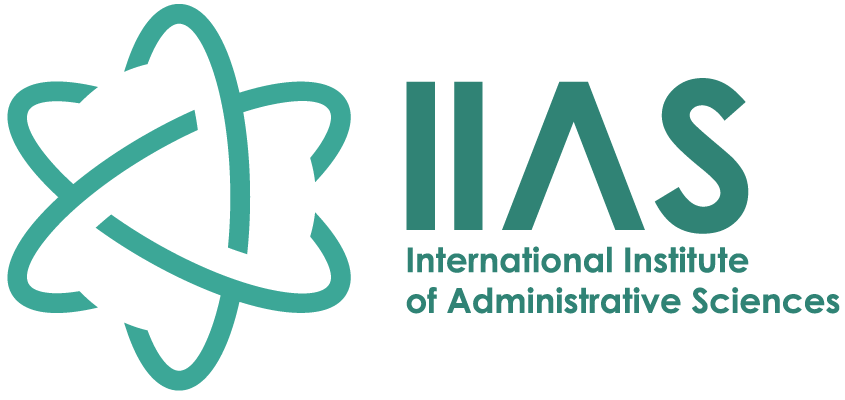
- 05 Jun 2025
In News:
India has secured the Presidency of the International Institute of Administrative Sciences (IIAS) for the term 2025–2028, marking a historic first for the country since becoming a member in 1998. The victory affirms India’s growing influence in the field of global public administration.
About IIAS
- Established: 1930
- Headquarters: Brussels, Belgium
- Nature: A global federation of 31 Member States, 20 National Sections, and 15 Academic Research Centres, dedicated to collaborative scientific research in public administration.
- Core Objectives:
- Promote collaboration on public governance solutions.
- Accredit academic and professional training programs in public management.
- Disseminate research and best practices in administrative sciences.
Although not formally affiliated with the United Nations, IIAS actively participates in UN mechanisms like the Committee of Experts on Public Administration (CEPA) and the UN Public Administration Network (UNPAN).
India’s Role and Election to Presidency
- India has been a Member State of IIAS since 1998, represented by the Department of Administrative Reforms and Public Grievances (DARPG).
- For the 2025–2028 term, Prime Minister Narendra Modi nominated V. Srinivas, Secretary, DARPG, as India's candidate in November 2024.
- Election Process:
- Hearings were held at Bharat Mandapam, New Delhi in February 2025.
- Four countries—India, South Africa, Austria, and Bahrain—submitted nominations.
- The final vote on June 3, 2025, saw India and Austria advance to the final round.
- Out of 141 votes, India secured 87 votes (61.7%), while Austria received 54 votes (38.3%).
Significance for India
- This marks India’s first Presidency of IIAS.
- The victory enhances India's position in global governance and showcases its administrative capabilities on an international platform.
- It also aligns with India’s focus on reforming and modernizing public administration through digital governance and institutional capacity-building.
Kichan and Menar Wetlands
- 05 Jun 2025
In News:
Recently, the Union Ministry of Environment announced that Kichan (Phalodi) and Menar (Udaipur) wetlands in Rajasthan have been recognized as Ramsar Sites, bringing India’s total to 91 Ramsar-designated wetlands—the highest in Asia.
About Menar Wetland:
- A freshwater monsoon wetland complex in Udaipur district, Rajasthan.
- Formed by three primary ponds: Braham Talab, Dhand Talab, and Kheroda Talab; the latter two are connected by flooded agricultural land during the monsoon.
- Habitat for endangered and migratory birds such as:
- Critically Endangered: White-rumped vulture (Gyps bengalensis), Long-billed vulture (Gyps indicus)
- Other species: Himalayan griffon, Egyptian vulture, Dalmatian pelican, Ferruginous pochard, Black-tailed godwit
- Home to over 70 plant species, including mango trees (Mangifera indica) that host colonies of Indian flying foxes (Pteropus giganteus).
- Community-led conservation: Menar village residents prevent poaching and fishing, earning it the title "Bird Village".
About Kichan Wetland:
- Located in Phalodi, Jodhpur, in the northern Thar Desert of Rajasthan.
- Comprises:
- Ratri Nadi (river)
- Vijaysagar Talab (pond)
- Riparian and scrub habitats
- Notable for supporting drought-resistant flora and over 150 bird species.
- Globally known for hosting over 22,000 migratory demoiselle cranes (Anthropoides virgo) each winter.
- A hub for birdwatchers, tourists, scientists, and students.
Ramsar Convention Overview:
- An intergovernmental treaty for the conservation of wetlands, signed in 1971 in Ramsar, Iran.
- Headquartered in Gland, Switzerland.
- Wetlands listed under the convention are known as Ramsar Sites—of international importance.
- Member countries (Contracting Parties) commit to identifying and protecting these wetlands.
World Wealth Report 2025
- 05 Jun 2025
In News:
The World Wealth Report 2025, released by the Capgemini Research Institute, highlights a significant surge in global and Indian high-net-worth individual (HNWI) wealth. The report covers 71 countries, representing over 98% of global Gross National Income (GNI) and 99% of world stock market capitalization.
India’s HNWI Landscape in 2024
- HNWI Wealth Growth: India witnessed an 8.8% increase in HNWI wealth in 2024.
- Total Millionaires: The country had 378,810 HNWIs by the end of 2024, with a cumulative wealth of $1.5 trillion.
- Millionaires Next Door: Among them, 333,340 individuals fell under the "Millionaires Next Door" category (investable assets between $1M–$5M), holding $628.93 billion in wealth.
- Ultra HNWIs: India was home to 4,290 Ultra-HNWIs (assets ≥ $30M), with combined assets worth $534.77 billion.
Global Trends in HNWI Wealth
- Global Growth: HNWI population worldwide rose by 2.6%, driven largely by a 6.2% rise in Ultra-HNWI numbers.
- Investment Trends: Alternative investments (private equity, cryptocurrencies) formed 15% of HNWI portfolios, signaling diversification beyond traditional assets.
- Top Contributors:
- United States added 562,000 millionaires, recording a 7.6% rise, reaching a total of 7.9 million HNWIs.
- The U.S. also holds 36% of centi-millionaires (net worth ≥ $100M) and 33% of the world's billionaires.
- India and Japan saw 5.6% growth, while China recorded a 1.0% decline in HNWI population.
Shifting Dynamics in Wealth Management
- A massive “great wealth transfer” is underway globally.
- 81% of global next-gen HNWIs and 85% of Indian next-gen HNWIs plan to switch wealth management (WM) firms within 1–2 years of inheritance.
- Key reasons include:
- Lack of preferred channel services (51%)
- Ineffective digital transaction tools (41%)
- Digital Transformation Need: The evolving expectations of next-gen clients are pushing firms toward AI-enabled advisory models and advanced digital infrastructure.
Offshore Wealth Allocation
- By 2030, 98% of Indian next-gen HNWIs plan to increase their offshore assets by over 10%.
- Motivations include:
- Superior investment options (55%)
- Better wealth management services (65%)
- Improved market connectivity (54%)
- Tax efficiency and political-economic stability (49%)
- Motivations include:
World Environment Day 2025
- 05 Jun 2025
In News:
Every year on June 5, people across the globe unite to celebrate World Environment Day, an initiative led by the United Nations Environment Programme (UNEP).
Key Highlights:
- Observed on: June 5 annually
- Initiated by: United Nations Environment Programme (UNEP)
- First celebrated: 1973 (following the 1972 Stockholm Conference on the Human Environment)
- Objective: Promote global awareness and action for environmental protection
Theme for 2025: "Beat Plastic Pollution"
- Focuses on the escalating crisis of plastic pollution and its adverse impact on ecosystems, wildlife, and human health.
- Highlights the need to transition away from single-use plastics, promote sustainable consumption, and adopt eco-friendly alternatives.
Key Statistics:
- Plastic production: Increased from 2 million tonnes (1950) to 430 million tonnes (2025)
- Marine pollution:19–23 million tonnes of plastic enter aquatic ecosystems annually
- Microplastics detected in oceans, mountains, and the human body
Host Country for 2025: Republic of Korea
- Chosen for its leadership in green innovation and sustainable practices.
- Initiatives include:
- Advanced waste segregation and recycling systems
- Bans on single-use plastics in major outlets
- Promotion of tech-driven eco-solutions
By hosting, South Korea aims to showcase scalable models for combating plastic pollution globally.
Historical Background
- Stockholm Conference 1972 laid the foundation for modern environmental governance.
- UNEP assigns a theme and host country annually to align global action.
- Over 150 countries now participate through:
- Clean-up drives
- Tree plantation campaigns
- Policy forums
- Environmental education programs
Significance
World Environment Day plays a vital role in:
- Raising awareness on climate change, pollution, deforestation, and sustainability
- Encouraging individual and community-level action
- Facilitating policy dialogue and regulatory reform
- Mobilizing youth leadership in environmental movements
UMEED Portal and Waqf (Amendment) Act, 2025
- 04 Jun 2025
In News:
The Government of India will launch the UMEED Portal to digitize and streamline the registration and management of Waqf properties under the Waqf (Amendment) Act, 2025.
What is the UMEED Portal?
- Full Form: Unified Waqf Management, Empowerment, Efficiency, and Development
- Purpose: A centralized digital platform to register, regulate, and monitor Waqf properties nationwide.
- Nodal Ministry: Ministry of Minority Affairs, in collaboration with State Waqf Boards and judicial authorities.
Objectives:
- Ensure transparent, efficient, and time-bound registration of Waqf assets.
- Digitally empower stakeholders with access to legal rights, obligations, and procedural information.
- Resolve long-pending disputes and enhance accountability in Waqf administration.
- Provide real-time data, including geo-tagged property mapping, to support policymaking.
Key Features:
- Time-Bound Registration:All Waqf properties must be registered within six months of the portal's launch.
- Geo-Tagging and Digital Mapping:Properties must be geo-tagged and include precise dimensions for registration.
- Dispute Resolution Mechanism:Properties not registered by the deadline will be automatically flagged as disputed and referred to Waqf Tribunals for adjudication.
- Legal Support Services:The portal offers awareness tools regarding the amended Act and clarifies legal entitlements.
- Women-Centric Provision:Properties solely in women’s names cannot be declared as Waqf. However, women, children, and the economically weaker sections (EWS) remain eligible beneficiaries.
About Waqf and Recent Legal Reforms:
- What is Waqf?
A Waqf is a permanent charitable endowment under Islamic law, where assets (usually land) are donated for religious or public welfare purposes. Such property is inalienable and cannot be sold, inherited, or transferred.
- Waqf (Amendment) Act, 2025:
- Digital Mandate: Mandatory online registration of all Waqf properties within 6 months.
- Judicial Oversight:Introduced provision for appealing Waqf Tribunal decisions in the High Court within 90 days.
- Tribunal Empowerment:Unregistered properties after the deadline will be treated as disputed and decided by Waqf Tribunals.
- Government Monitoring:Enhanced role of State Waqf Boards in ensuring compliance, registration, and dispute handling.
Significance:
- Aims to reduce litigation, encroachments, and opacity in Waqf land management.
- Bridges the gap between community welfare and digital governance.
- Strengthens institutional mechanisms for protecting religious endowments and improves access to justice.
Seva Se Seekhen Campaign
- 04 Jun 2025
In News:
The Government of India has launched the ‘Seva Se Seekhen’ (Learn by Doing) campaign to empower youth through hands-on experience at Jan AushadhiKendras (JAKs). Starting from June 1, 2025, this initiative aims to blend experiential learning with public health outreach.
About the Campaign:
- Launched in: 2025
- Nodal Ministries:
- Ministry of Youth Affairs and Sports
- Department of Pharmaceuticals, Ministry of Chemicals and Fertilizers
- Framework:Part of the National Youth Development Framework, aligning youth engagement with grassroots service.
Objectives:
- Provide experiential learning opportunities in real-world public service settings.
- Raise awareness about generic medicines and enhance health literacy.
- Equip youth with technical and soft skills in areas such as inventory, logistics, customer service, and communication.
- Foster values such as discipline, empathy, and civic responsibility among the youth.
Key Features:
- Nationwide Implementation:
- Five youth volunteers per district will be placed across five Jan AushadhiKendras.
- Covers all states and Union Territories.
- Volunteer Sources:Participants are selected from:
- MY Bharat
- National Service Scheme (NSS)
- Pharmacy colleges
- Other youth-focused platforms
- Duration:15-day structured engagement, including guided tasks and learning outcomes.
Roles and Responsibilities of Volunteers:
- Support daily functioning and customer services at JAKs.
- Assist in medicine inventory and logistics management.
- Promote generic medicine awareness among the public.
- Participate in community health outreach activities.
- Observe backend processes like supply chains and stock maintenance.
Key Benefits for Youth:
- Practical exposure to pharmacy operations and public health service.
- Skills in record-keeping, inventory handling, and basic operations.
- Development of employability and customer interaction skills.
- Insights into affordable healthcare delivery under schemes like Pradhan Mantri Bhartiya JanaushadhiPariyojana (PMBJP).
Operation Spider’s Web
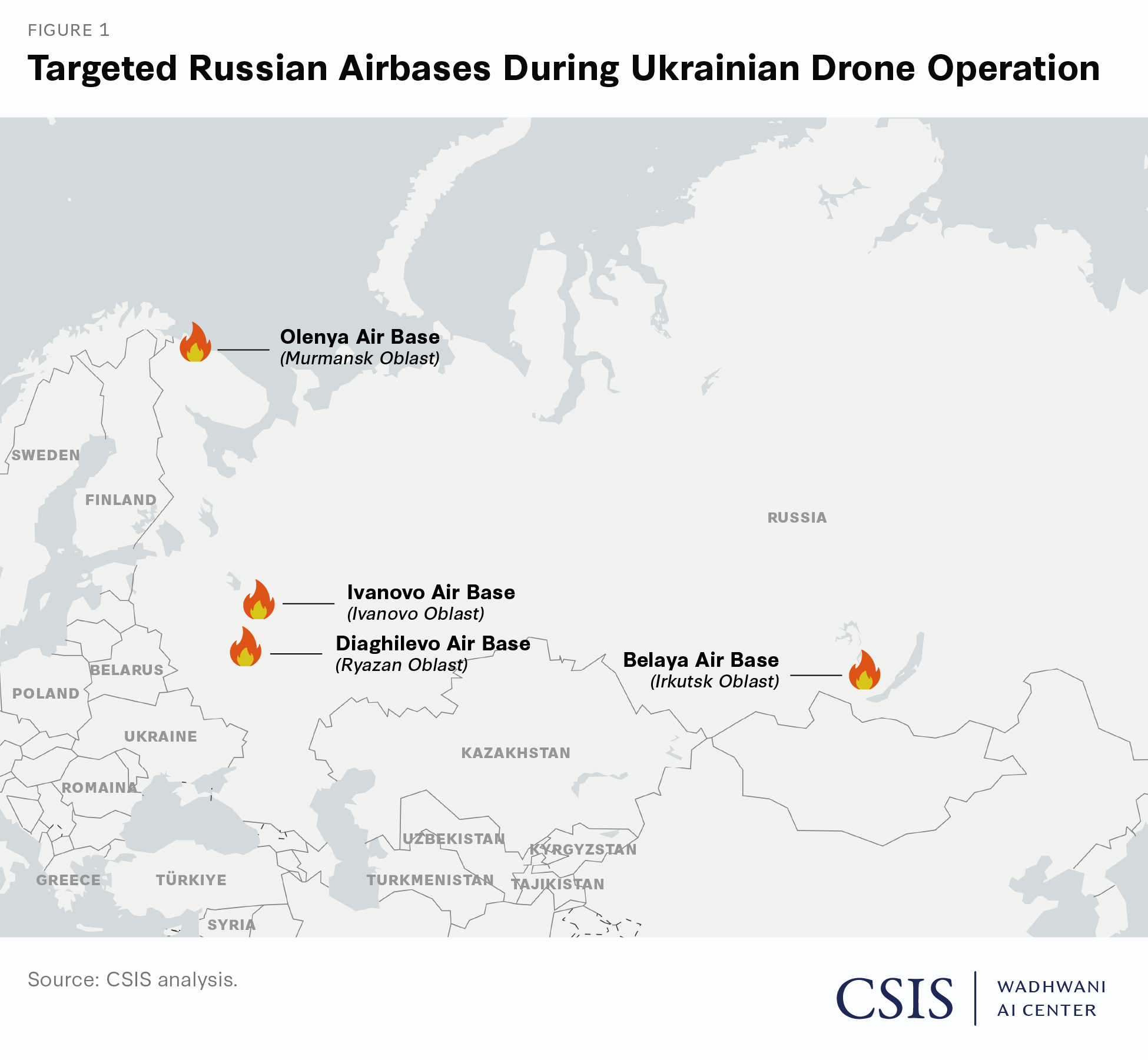
- 04 Jun 2025
In News:
On June 1, 2025, Ukraine executed Operation Spider’s Web, its most extensive drone-based military strike against Russia to date. The attack destroyed an estimated $7 billion worth of Russian aircraft, including approximately 34% of Russia’s strategic bomber fleet. The operation occurred just before the second round of peace talks between the two countries in Istanbul.
Key Highlights:
- Nature of Operation:A high-precision, long-range drone strike aimed at crippling Russia’s strategic air power, especially bombers capable of launching cruise missiles and nuclear warheads.
- Planning and Execution:
- Orchestrated over 18 months by the Security Service of Ukraine (SBU).
- 117 explosive-laden drones were deployed simultaneously.
- Drones were concealed in wooden sheds on civilian trucks, enabling stealth transport across vast distances.
- Once positioned, they were remotely launched, surprising Russian air defences.
- Airbases Targeted:The operation struck five major Russian airbases:
- Belaya (Irkutsk)
- Dyagilevo (Ryazan)
- Ivanovo Severny
- Olenya (Murmansk)
- Ukrainka
- Geographic Reach:Some drone targets were over 4,300 km from the front lines, marking the deepest Ukrainian strike inside Russian territory.
Strategic and Political Context:
- The drone strike came hours after Russia's Iskander-M missile attack on a Ukrainian military training centre in Dnipropetrovsk, which killed 12 soldiers and injured over 60.
- Ukrainian Major General MykhailoDrapatyi resigned, accepting personal responsibility for the missile casualties.
- Ukrainian President Volodymyr Zelenskyy hailed Operation Spider’s Web as a “brilliant success,” showcasing Ukraine’s evolving tactical capabilities.
- The operation served to strengthen Ukraine’s negotiating position ahead of the June 2 Istanbul peace talks.
Peace Negotiation Backdrop:
- The Istanbul talks followed an earlier round that resulted in the largest prisoner exchange since the start of the war but lacked a concrete ceasefire plan.
- Ukraine is expected to propose:
- A 30-day ceasefire
- Mutual prisoner release
- A high-level summit between Presidents Zelenskyy and Putin
- However, Russia has reportedly rejected all ceasefire proposals and has not submitted a formal response.
Wider Conflict Situation:
- As of late May 2025, Ukraine has lost around 18% of its territory to Russian control.
- Meanwhile, Russian forces continue their advance, recently capturing a village in Ukraine’s northern Sumy region.
Caspian Gull (Laruscachinnans)
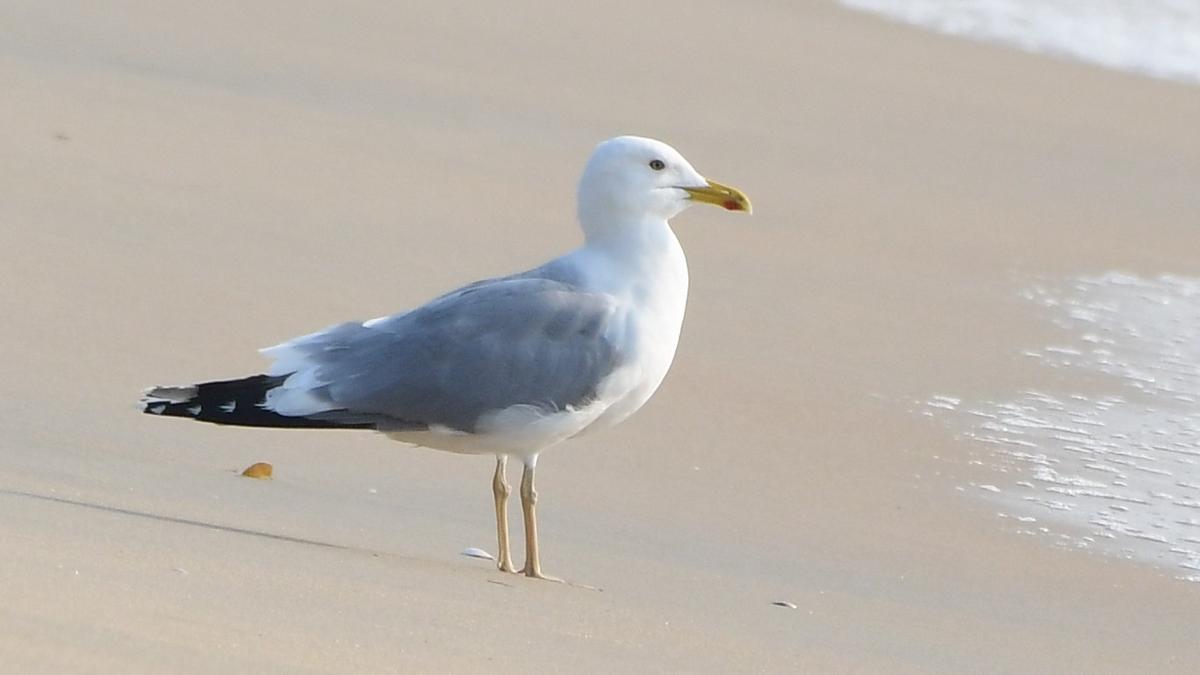
- 04 Jun 2025
In News:
In a significant ornithological development, the Caspian Gull, one of the rarest gull species to be recorded in India, was positively identified five years after being sighted at Kappad Beach, Kozhikode, Kerala. This marks the first confirmed sighting of the species in Kerala, and only the second in southern India.
Discovery and Identification:
- Ornithologist Abdulla Paleri first spotted the bird in February 2020 but took five years to confirm its identity due to its close resemblance to the more commonly seen Steppe Gull.
- The Caspian Gull differs subtly in features such as head and beak shape, posture, wing pattern, and leg morphology.
- Images were shared with international experts and on the eBird platform, where ornithologists Oscar Campbell and Hans Larsson confirmed the identification. The sighting has remained unchallenged since.
About Caspian Gull (Laruscachinnans):
- A monotypic, large, white-headed gull species, considered rare in India.
- Regularly breeds in Central Asia, particularly in steppe and semi-desert habitats with lakes, rivers, and reservoirs.
- Nesting usually occurs on flat, low-lying areas near water bodies, often surrounded by reedbeds.
- The species feeds on fish, insects, molluscs, and other invertebrates.
Migration Pattern:
- It migrates from the Black Sea and Caspian Sea region to southern and eastern Kazakhstan, western China, and parts of South Asia during winter.
- Traditionally winters in the eastern Mediterranean, Persian Gulf, and western India (like Gujarat).
- Increasingly, small populations are dispersing into Europe, including Sweden, Norway, and Denmark.
- The Kozhikode gull is believed to be a straggler—a bird that deviates from its usual migratory route.
Conservation Status:
- IUCN Red List:Least Concern, Despite its rarity in India, the species is not globally threatened.
BharatGen
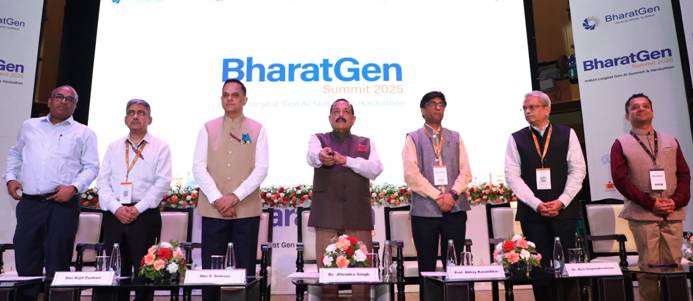
- 04 Jun 2025
In News:
Union Minister Dr. Jitendra Singh launched BharatGen, India’s first indigenously developed, government-funded Multimodal Large Language Model (LLM) at the BharatGen Summit 2025, marking a significant step in India’s AI innovation landscape.
About BharatGen:
- BharatGen is a Multimodal LLM designed to support 22 Indian languages and various content formats—text, speech, and image.
- Developed under the National Mission on Interdisciplinary Cyber-Physical Systems (NM-ICPS) and implemented by the TIH Foundation for IoT and IoE at IIT Bombay.
- Supported by the Department of Science and Technology (DST), it is a collaborative effort involving premier academic institutions, researchers, and innovators.
Key Features:
- Multilingual and multimodal capabilities (text, voice, image inputs).
- Open-source platform to encourage accessible innovation.
- Trained on Indian datasets to reflect Indian linguistic and cultural diversity.
- Integrated applications across critical sectors like healthcare, education, governance, and agriculture.
- Aims to deliver region-specific AI solutions rooted in Indian values and societal contexts.
Implementation Mechanism:
- Executed through 25 Technology Innovation Hubs (TIHs) across India.
- Four of these TIHs have been upgraded to Technology Translational Research Parks (TTRPs) for real-world deployment.
- Guided by four pillars: technology development, entrepreneurship, human resource development, and international collaboration.
First-Person View (FPV) Drones
- 03 Jun 2025
In News:
Recently, Ukraine conducted a major drone strike on Russia, reportedly destroying over 40 aircraft using First-Person View (FPV) drones—marking one of the deepest strikes into Russian territory since the start of the conflict in 2022. This highlights the growing role of FPV drones in modern asymmetric warfare.
What are FPV Drones?
First-Person View (FPV) drones are unmanned aerial vehicles (UAVs) that allow remote pilots to view the drone’s surroundings through a camera mounted on the drone. The live feed can be transmitted to:
- Specialized goggles
- Smartphones
- Other display screens
This immersive view enables highly precise navigation and control.
Key Features and Technologies
- GPS-Independent Navigation: Operates effectively even when GPS signals are jammed or unavailable.
- SmartPilot System: Uses visual-inertial navigation by interpreting camera data to assess the drone's position and orientation.
- LiDAR Integration: Enhances terrain mapping and obstacle detection in complex environments.
- Low Cost: A functional FPV drone can cost as little as $500, making them highly affordable compared to traditional weapon systems.
Operational Use in Combat
- Reconnaissance First: Typically, a long-range reconnaissance drone is used to identify the target area before deploying FPV drones for strikes.
- Deep Strike Capability: Despite having a short range (a few kilometres), FPV drones offer stealth and precision to strike deeply into enemy territory.
- Combat Strategy: Their agility and affordability make FPV drones a key component of attrition warfare, especially for resource-constrained nations.
Advantages in Warfare
- Cost-effectiveness: Offers high-impact capability at a fraction of the cost of conventional weapons.
- Reduced Human Risk: Limits the need for manned missions in hostile territory.
- Stealth: Smaller size and low acoustic footprint make them harder to detect and intercept.
- High Destructiveness: Able to carry payloads such as explosives, effectively targeting tanks, aircraft, and installations.
Challenges and Limitations
- Limited Range: Operates within a few kilometres, requiring deployment close to target zones.
- Reduced Situational Awareness: Pilots rely solely on camera feed, which may not provide full spatial context.
- Need for Visual Observers: In complex environments, an additional observer may be needed to guide the operator safely.
Ukraine’s Use of FPV Drones
Ukraine has effectively integrated FPV drones into its military strategy:
- In November 2023, FPVs were credited as a low-cost, high-impact method of resisting Russian advances.
- NATO sources indicated that over two-thirds of Russian tanks destroyed recently were hit by FPV drones.
- Ukrainian drone manufacturer Vyriy Drone delivered 1,000 indigenous FPVs in March 2025.
- Ukraine is projected to produce over 4 million drones in 2025, reflecting a significant scaling of domestic capabilities.
Geopolitical and Strategic Implications
- Technological Self-Reliance: Domestic production protects nations from geopolitical supply chain disruptions (e.g., China’s chip exports).
- Global Proliferation: Countries like Israel and Iran have also developed drone systems, including HAROP and Shahed drones respectively.
Jharkhand’s First Tiger Safari
- 03 Jun 2025
In News:
The Jharkhand government has proposed setting up its first-ever tiger safari in the fringe area of the Palamau Tiger Reserve (PTR), located in Latehar district. This initiative aims to promote wildlife education, conservation awareness, and eco-tourism, while also creating employment opportunities.
What is a Tiger Safari?
A tiger safari refers to a tourism model where rescued, conflict-prone, or orphaned tigers are housed in naturalistic enclosures, ensuring sightings for visitors. It differs from traditional wild safaris, where sightings are not guaranteed. The concept was first proposed in the NTCA's 2012 tourism guidelines, refined in 2016, and later aligned with the Supreme Court’s 2024 directive, which mandates that such safaris be located outside core and buffer zones of tiger reserves.
Legal and Regulatory Framework
- Governed by:
- Wildlife (Protection) Act, 1972
- National Tiger Conservation Authority (NTCA) Guidelines (2012, 2016)
- Central Zoo Authority (CZA) for animal welfare, enclosure design, and project compliance
- Supreme Court Ruling (March 2024):
- Tiger safaris must not be located inside core or buffer zones.
- Intended to protect natural habitats and uphold conservation goals.
About Palamau Tiger Reserve (PTR)
- Established: 1974 under Project Tiger
- Location: Chhotanagpur Plateau, Jharkhand
- Rivers: North Koel, Burha (perennial), Auranga
- Vegetation: Northern Tropical Dry Deciduous forest (Sal-dominated)
- Key Fauna: Bengal Tiger, Asiatic Elephant, Sloth Bear, Leopard, Indian Pangolin, Otter
- Historical Note: Site of the world’s first pugmark-based tiger census (1932)
Project Details
- Location: Barwadih Western Forest Range (fringe of PTR, outside core/buffer zones)
- Size: Approx. 150 hectares
- Animals Housed: Only rescued, conflict-prone, or orphaned tigers from reserves/zoos (not wild or zoo-bred tigers unless approved)
- Objectives:
- Promote tourism and conservation education
- Create an experiential learning space for visitors
- Generate employment (~200 local jobs)
The Central Zoo Authority (CZA) will assess the site and species selection. Post Forest Department clearance, the Detailed Project Report (DPR) will be submitted to NTCA and CZA. Approvals may take 5–6 months, followed by a construction period of ~18 months.
Concerns and Challenges
- Tribal and Community Rights:Activists caution that such projects may marginalize forest-dwelling communities and restrict access to traditional forest-based livelihoods (grazing, NTFP collection).
- Consent of Local Communities:As per the Forest Rights Act, projects on forest land must involve Gram Sabha consultation. Activists argue this has yet to be fully addressed.
- State's Clarification:Officials maintain that the site lies on forest land under state management, with no expected displacement.
RBI’s Draft Guidelines on Gold Loans

- 03 Jun 2025
Why is the RBI proposing changes to gold loan regulations?
In April 2024, the Reserve Bank of India (RBI) released draft guidelines on loans against gold to harmonise regulations across banks and NBFCs and to address irregularities. The move follows an extraordinary surge in gold-backed loans during FY24:
- Gold loan portfolios grew over 50% across banks and NBFCs.
- For banks, the portfolio more than doubled (104% growth).
This rapid growth, amid rising gold prices and lax lending standards, raised regulatory concerns.
What are the key proposals in the draft guidelines?
- LTV Norms:
- The Loan-to-Value (LTV) ratio remains capped at 75%.
- For bullet repayment loans for consumption, accrued interest must be included in the LTV calculation, effectively lowering the loan amount disbursed.
- Ownership Proof:Borrowers must furnish proof of ownership for the gold pledged.
- Valuation Standards:
- Gold should be valued based on 22-carat price.
- Uniform procedures must be followed to assess the purity and weight.
- Loan Renewal & Fresh Sanctions:
- Renewals or top-ups are permitted only if:
- The existing loan is standard, and
- It complies with the LTV limit.
- Concurrent loans for both consumption and income-generation are disallowed.
- A fresh loan can only be granted after full repayment (principal + interest) of the previous loan.
- Renewals or top-ups are permitted only if:
- Collateral Return Timeline:If the gold is not returned within 7 working days after repayment, the lender must compensate the borrower at ?5,000/day for each day of delay.
Likely Impact on Borrowers and Lenders
Borrowers:
- May face reduced loan amounts and higher documentation requirements.
- Small and rural borrowers, dependent on gold loans for agriculture and allied sectors, may experience reduced accessibility.
NBFCs and Banks:
- NBFCs that frequently renew or top-up gold loans could lose flexibility.
- Compliance costs will rise due to stringent documentation, valuation, and reporting norms.
- Smaller NBFCs relying on re-pledging of gold may face liquidity issues.
- Interest rates may rise to offset higher operational expenses.
Is a uniform policy suitable?
A one-size-fits-all policy may not be practical. Gold loans are a lifeline for rural households with limited access to formal credit. Experts suggest:
- Differentiated norms for micro gold loans (small-ticket loans) and high-value loans.
- Consideration for the informal nature of ownership in many rural households.
Krishi Nivesh Portal
- 03 Jun 2025
In News:
In an effort to streamline and accelerate investments in India’s agriculture and allied sectors, the Government of India has launched the Krishi Nivesh Portal, developed by the Ministry of Agriculture & Farmers Welfare.
The initiative aligns with the government’s broader goal of promoting the ease of doing business in agriculture by integrating schemes from multiple Central ministries and State governments into a single digital platform.
Key Features of the Portal
- One-Stop Solution: The portal acts as a centralized hub providing real-time access to information on agricultural schemes from various government departments and ministries.
- Multi-Stakeholder Access: It is designed to cater to farmers, entrepreneurs, Farmer Producer Organizations (FPOs), industries, and agri-startups.
- Scheme Integration: As of now, the portal integrates 17 flagship schemes spanning seven Union Ministries, including:
- Agriculture Infrastructure Fund
- Animal Husbandry Infrastructure Development Fund
- PM KisanSampada Yojana
- PM-KUSUM
- Technological Features: It offers a user-friendly interface, chatbot support, and interactive dashboards for data-driven insights and monitoring.
- Investment Tracking: Users can track application status, explore investment opportunities based on geographical spread, and gain assistance with loan disbursal.
Institutional Integration
- Currently, 14 Union ministries/departments and 9 state government departments are involved in implementing schemes related to agriculture and allied sectors.
- Ministries already integrated include:
- Ministry of Agriculture
- Ministry of Food Processing Industries
- Ministry of Rural Development
- Ministry of Jal Shakti
- Ministry of New and Renewable Energy
- Ministry of Fertilisers
Efforts are underway to onboard over 300 schemes from various ministries and states, including those related to credit-linked initiatives, PPP models, venture capital projects, and startups.
Significance for Agricultural Sector
- The portal addresses key challenges such as fragmented scheme information, siloed departmental operations, and delays in loan processing.
- It aims to unlock the investment potential of India’s agri-sector, especially for private investors, by offering a consolidated, transparent, and accessible interface.
- According to official estimates:
- The revised budget allocation for FY 2024–25 for agricultural investment schemes stands at ?1.31 lakh crore.
- In FY 2021–22, private sector investment in agriculture amounted to ?2.79 lakh crore.
Sabine’s Gull Spotted at Nalsarovar
- 03 Jun 2025
In News:
In a remarkable ornithological event, the Sabine’s Gull — a rare Arctic seabird — has been observed at Nalsarovar Bird Sanctuary in Gujarat. This marks the species’ first recorded appearance in India since 2013, when it was last sighted in Kerala, underlining the dynamic migratory patterns affecting India’s wetland ecosystems.
About Nalsarovar Bird Sanctuary
- Located nearly 64 km west of Ahmedabad, Nalsarovar Bird Sanctuary is one of Gujarat’s most prominent wetland ecosystems. Encompassing an area of 120.82 sq km, it comprises a shallow, seasonal lake interspersed with around 360 islets, creating a rich mosaic of aquatic habitats.
- This natural lake traces its origin to the 15th century, following the construction of a check dam on the Sabarmati River. Initially designed to serve irrigation and drinking water needs of nearby villages, the lake gradually evolved into a crucial habitat for avifauna. Recognition of its ecological significance grew over time, prompting colonial authorities in the early 20th century to take protective measures.
- Eventually, in 1969, the Government of Gujarat declared Nalsarovar a bird sanctuary, and it was further accorded the status of a Ramsar wetland site in 2012, signifying its global importance under the Ramsar Convention.
- Flora: The sanctuary supports a wide variety of aquatic and wetland plant life, with 48 algae species and 72 flowering plant species recorded. Common plant species include Cyperus, Scirpus, Typha ungustata, Eleocharis palustris, Ruppia, Potamogeton, Vallisneria, Naias, and Chara.
- Fauna:Nalsarovar is home to nearly 250 bird species, making it a haven for bird watchers. Regular sightings include both greater and lesser flamingos, pelicans, ducks, geese, coots, rails, cranes, and a variety of wading and aquatic birds like herons, egrets, storks, spoonbills, and sarus cranes.
- Beyond birds, the sanctuary also supports mammalian fauna. On its southern and southwestern peripheries, species such as the Indian wild ass, mongoose, jungle cat, Indian fox, jackal, wolf, and striped hyena are found.
Sabine’s Gull: Profile
- The Sabine’s Gull (Xemasabini), also known as the fork-tailed gull or xeme, is a small gull species notable for its elegant flight and distinctive wing markings. Adults can be recognized by their pale grey backs, black wingtips, white secondary feathers, and forked white tails.
- This gull breeds in high Arctic and subarctic zones across North America, Russia, Greenland, and Svalbard, and is a rare migrant in South Asia.
- According to the IUCN Red List, it is currently categorized as a species of Least Concern, although sightings in India are extremely uncommon.
ULLAS – Nav Bharat SaakshartaKaryakram and Goa’s Milestone in Literacy
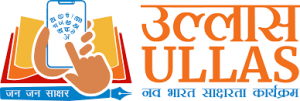
- 02 Jun 2025
In News:
Recently, Goa became the second state in India to achieve full functional literacy under the ULLAS – Nav Bharat SaakshartaKaryakram (New India Literacy Programme), marking a key achievement in India’s goal of attaining full literacy by 2030, as envisioned in the National Education Policy (NEP) 2020.
About ULLAS
- ULLAS stands for Understanding Lifelong Learning for All in Society.
- It is a centrally sponsored scheme implemented by the Ministry of Education from 2022 to 2027.
- Target Group: Adults aged 15 years and above who missed formal schooling.
- Alignment: The scheme is aligned with NEP 2020, emphasizing inclusive and equitable education.
- Implementation Basis: The programme is built on the spirit of volunteerism and Kartavya Bodh (sense of duty).
Five Components of the ULLAS Scheme:
- Foundational Literacy and Numeracy
- Critical Life Skills
- Basic Education
- Vocational Skills Development
- Continuing Education
Digital Outreach
- The ULLAS mobile app facilitates registration of learners and volunteers.
- It also provides access to learning resources through the DIKSHA portal of NCERT.
- So far, over 2.40 crore learners and 41 lakh volunteer teachers have been registered on the app.
- Over 1.77 crore learners have taken the Foundational Literacy and Numeracy Assessment Test (FLNAT).
Goa Achieves Full Literacy
- Declared Fully Literate: On May 30, 2025, during the 39th Goa Statehood Day celebrations at Panaji, Goa was declared fully literate.
- Reported Literacy Rate: As per PLFS 2023–24, Goa had a literacy rate of 93.60%, among the highest in India.
- State Survey Update: A state-led survey confirmed that Goa had crossed the 95% benchmark, qualifying it as fully literate under ULLAS.
Key Factors Behind Goa’s Success
- Adopted a Whole-of-Government approach, involving departments such as:
- Directorate of Panchayats
- Municipal Administration
- Social Welfare
- Planning & Statistics
- Women & Child Development
- Engaged SwayampurnaMitras for grassroots awareness and learning support.
- Played an active role in certification and inclusion of learners into the literacy programme.
- Strong collaboration between SCERT, local administration, school heads, volunteers, and field workers ensured last-mile delivery.
Significance for India
- Goa's achievement underscores the effectiveness of decentralized, people-driven literacy campaigns.
- Demonstrates the potential of tech-enabled platforms, volunteerism, and inter-departmental coordination.
- Sets a model for other states in achieving India’s literacy goal by 2030.
- Reinforces the broader national vision of “Jan-Jan Saakshar” and a Viksit Bharat.
Kawal Tiger Reserve and KumramBheem Conservation Reserve
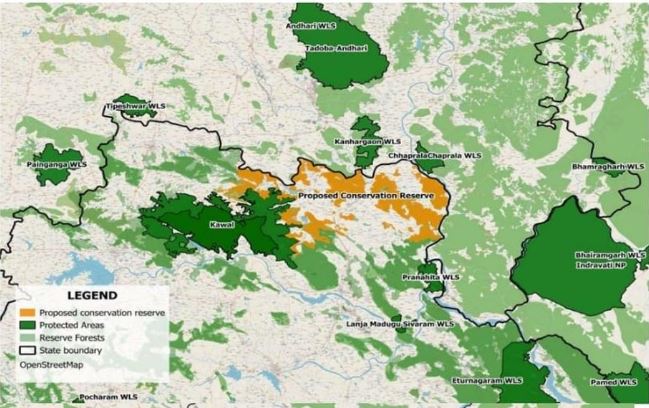
- 02 Jun 2025
In News:
In a recent development, the Telangana government has designated the tiger corridor connecting the Kawal Tiger Reserve (Telangana) with the Tadoba-Andhari Tiger Reserve (Maharashtra) as the KumramBheem Conservation Reserve, under Section 36(A) of the Wildlife Protection Act, 1972. This move is aimed at preserving critical wildlife corridors in the Central Indian Landscape.
Kawal Tiger Reserve:
- Location: Situated in Telangana, along the Godavari River, forming part of the Deccan Peninsula – Central Highlands.
- Biogeographic Zone: Lies at the southern tip of the Central Indian Tiger Landscape.
- Connectivity: Links with Tadoba-Andhari (Maharashtra), Indravati (Chhattisgarh), and other reserves like Tipeshwar, Chaprala, and Kanhargaon.
- Vegetation Type: Southern Tropical Dry Deciduous Forests.
- Flora: Dominated by teak, bamboo, and species like Anogeissuslatifolia, Terminalia arjuna, Boswellia serrata, etc.
- Fauna: Hosts tiger, leopard, nilgai, chinkara, sambar, blackbuck, wild dog, wolf, and jungle cat.
KumramBheem Conservation Reserve: Newly Notified Area
- Legal Basis: Declared under Section 36(A), Wildlife Protection Act, 1972, which allows states to notify government-owned land adjacent to or connecting protected areas as conservation reserves.
- Total Area: 1,492.88 sq km (149,288.48 hectares)
- District &Mandals Covered: Spread across KumramBheemAsifabad district, covering parts of Kerameri, Wankidi, Asifabad, Sirpur, Koutala, Bejjur, Kagaznagar, Rebbana, Dahegaon, and Tiryanimandals.
- Forest Blocks Included: 78 blocks including Garlapet, Ada, Manikgarh East & West, Danora, Gudem, Bejjur, Kadamba, and Girali.
Ecological Significance
- Tiger Movement: Over the last decade, more than 45 unique tigers (mostly transient) have been documented in this corridor through camera trapping and surveys.
- Breeding Evidence: Since 2015, 17 tiger cubs born from 3 tigresses have been recorded. The 2022 Tiger Census confirmed 4 adult tigers and 3 cubs in the area.
- Leopard Presence: 8 leopards were recorded during the All India Leopard Estimation, 2022.
- Other Carnivores: Includes sloth bear, hyena, wild dog, wolf, honey badger, and jungle cat.
- Herbivore Diversity: Rich prey base such as gaur, sambar, nilgai, chital, muntjac, four-horned antelope, and Indian gazelle.
- Avifauna: Home to 240+ bird species, including rare species like the Malabar Pied Hornbill and Long-billed Vulture, the latter using the reserve as a nesting site.
- Elephant Movement: Occasional elephant presence has also been reported.
Governance
A Conservation Reserve Management Committee has been established. Members include:
- District Forest Officer (DFO) of KumramBheemAsifabad (Convenor)
- Sarpanches of local panchayats (e.g., Karji, Motlaguda, Murliguda)
- Representatives from NGOs like Hyderabad Tiger Conservation Society, WWF-India, and Wildlife Conservation Trust
- Officials from Veterinary, Agriculture, and Forest Divisions
Ghatampur Thermal Power Project
- 02 Jun 2025
In News:
Prime Minister Narendra Modi recently dedicated Unit-1 (660 MW) of the Ghatampur Thermal Power Project, located in Kanpur Nagar, Uttar Pradesh, marking a major step forward in India’s thermal power capacity and energy security goals.
Project Overview
- Location: Ghatampur, Kanpur Nagar District, Uttar Pradesh
- Implementing Agency: Neyveli Uttar Pradesh Power Ltd (NUPPL) — a joint venture between
- NLC India Ltd (51% share)
- Uttar Pradesh Rajya Vidyut Utpadan Nigam Ltd (UPRVUNL) (49% share)
- Total Capacity: 3 units × 660 MW = 1,980 MW
- Project Cost: ?21,780.94 crore
Commissioning Timeline
- Unit-1 (660 MW): Commissioned in December 2024, dedicated in May 2025
- Remaining Units: Expected to be operational by December 2025
Power Distribution Agreement
- Uttar Pradesh: Receives 75.12% (1,487.28 MW) of the total power
- Assam: Allocated 24.88% (492.72 MW), subject to transfer of 20% equity from UPRVUNL to Assam Government
Technological and Environmental Features
- Efficient Supercritical Technology:Utilizes supercritical boilers with 88.81% efficiency, reducing fuel usage and emissions.
- Zero Liquid Discharge (ZLD):Ensures no industrial wastewater release, protecting surrounding land and water bodies.
- Air Pollution Control:Equipped with modern pollution mitigation systems:
- Selective Catalytic Reduction (SCR) – Controls NOx emissions
- Flue Gas Desulphurization (FGD) – Reduces SOx emissions
- Continuous Emission Monitoring System (CEMS) and Ambient Air Quality Monitoring Stations (AAQMS) – Ensure real-time pollution tracking
- Water Conservation Measures:
- 288 km of canal lining saves approx. 195 million litres/day
- Raw water storage capacity of 46 lakh cubic meters
Fuel Security
- The plant sources coal from its own captive mine, producing 9 million tonnes annually.
- It maintains a 30-day coal stockpile, equivalent to 10.165 lakh tonnes, ensuring uninterrupted operation.
IndiaAI Mission
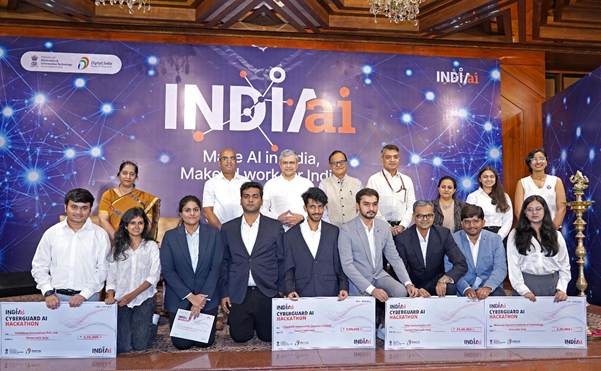
- 02 Jun 2025
In News:
India has taken a major step toward self-reliance in Artificial Intelligence with the expansion of its national AI compute infrastructure and the selection of three new startups to build indigenous foundation models under the IndiaAI Mission.
Key Highlights
- Compute Infrastructure Boost:India’s total GPU capacity has now surpassed 34,000 units, up from the initial 10,000-target. A fresh addition of 15,916 GPUs to the existing 18,417 empanelled GPUs brings the total to 34,333 GPUs, now available through the IndiaAI Compute Portal (operational since March 2025).
- Subsidised Access:These GPUs are made available at a subsidised rate of ?67/hour, well below the global average of ?115/hour. This has been made possible through private sector empanelment instead of government-built data centres. Service providers receive up to 40% capital subsidy, enabling rapid infrastructure rollout.
- Empanelled Providers:Seven private companies were empanelled for compute provisioning:
- Cyfuture India Pvt. Ltd.
- Ishan Infotech Ltd.
- Locuz Enterprise Solutions Ltd.
- Netmagic IT Services Pvt. Ltd.
- Sify Digital Services Ltd.
- Vensysco Technologies Ltd.
- Yotta Data Services Pvt. Ltd.
Foundation Model Development
Under the IndiaAI Foundation Model initiative, three new startups have joined Sarvam AI (selected earlier in April 2025) to build India-specific Large Language Models (LLMs):
- Soket AI: Will develop a 120-billion parameter open-source model focused on Indian languages and use cases in defence, healthcare, and education.
- Gnani AI: Building a 14-billion parameter Voice AI model for real-time, multilingual speech recognition and reasoning.
- Gan AI: Developing a 70-billion parameter multilingual TTS (text-to-speech) model aiming for "superhuman" capabilities surpassing global benchmarks.
- Sarvam AI: Previously selected to create a 120-billion parameter Sovereign AI model, following the release of Sarvam-1 (2B parameters) and Sarvam-M (24B parameters).
These foundation models will be trained on Indian datasets and tailored for governance, public service delivery, and regional language support.
AI Kosh& Innovation Initiatives
- AI Kosh: A public dataset platform with 367 datasets uploaded, enabling research and model training using India-relevant data.
- IndiaAI I4C CyberGuard Hackathon: In collaboration with the Ministry of Home Affairs, AI models were developed for identifying cybercrime patterns from complex inputs like handwritten FIRs and audio calls on the National Cyber Crime Reporting Portal.
- Startup Innovation & Skill Development: Funding support, AI labs in Tier-II cities, and talent development programs are part of a broader push to promote innovation and reverse brain drain.
About IndiaAI Mission
- Launched by: Ministry of Electronics & Information Technology (MeitY)
- Cabinet Approval: March 2024 with a budget of over ?10,000 crore
- Objectives:
- Develop indigenous AI capabilities and infrastructure
- Democratize AI access for governance, startups, and citizens
- Promote ethical and safe AI use
- Position India among the global AI leaders
India Develops its first indigenous Mechanical Thrombectomy Device for Stroke Treatment
- 02 Jun 2025
In News:
In a significant milestone for India’s medical technology sector, the Technology Development Board (TDB) under the Department of Science and Technology (DST) has extended support for the development of the country’s first indigenously manufactured mechanical thrombectomy device for the treatment of acute ischemic stroke.
What is a Mechanical Thrombectomy Device?
The device is a minimally invasive medical tool designed to treat acute ischemic stroke, which occurs due to a blockage in a large blood vessel in the brain. Unlike conventional thrombolytic drugs that dissolve clots chemically, this device physically extracts the clot, thereby restoring blood flow swiftly and reducing the risk of severe brain damage or paralysis.
Development and Manufacturing
This pathbreaking innovation was developed by S3V Vascular Technologies Ltd, based in Mysuru, with financial backing from the TDB. The manufacturing takes place at an advanced, high-precision production facility within the Medical Devices Park in Oragadam, Tamil Nadu.
Key Features and Technological Highlights
- Indigenous Design: S3V is the first Indian company to conceptualize and produce stroke-intervention tools such as microcatheters, aspiration catheters, guidewires, and stent retrievers.
- R&D and Patents: The company has filed multiple patents, particularly for innovations in clot retriever head design and advanced catheter structures.
- Training and Capacity Building: A simulator-based training program has been initiated to train young medical professionals, with a focus on outreach in Tier-II cities.
- Global Compliance: The device aims to meet CE and USFDA standards, paving the way for international exports and aligning with global quality benchmarks.
Significance for India
- Reduces Import Dependency: The device addresses India’s reliance on expensive, imported stroke-care equipment.
- Cost-Effective Healthcare: By making stroke treatment more affordable, it enhances access to quality care for economically weaker sections.
- Supports Public Health Initiatives: It is expected to be integrated into government schemes like Ayushman Bharat, strengthening the country’s universal healthcare mission.
- Boosts MedTech Ecosystem: This innovation is a major stride in positioning India as a global player in the high-end medical devices sector.
DHRUVA(Digital Hub for Reference and Unique Virtual Address)
- 01 Jun 2025
In News:
In May 2025, the Department of Posts, under the Ministry of Communications, released the policy framework for DHRUVA (Digital Hub for Reference and Unique Virtual Address) — a key initiative aimed at creating a standardized, geo-coded digital address infrastructure across India.
What is DHRUVA?
DHRUVA is a Digital Public Infrastructure (DPI) initiative that conceptualizes Address-as-a-Service (AaaS) — a secure, consent-based, and interoperable system for managing and sharing address data. It builds upon the earlier DIGIPIN (Digital Postal Index Number) system, which created a national-level, geo-tagged addressing grid for improved governance and service delivery.
Objectives of DHRUVA
- Transform address information into a digital public good.
- Enable secure, standardized, and interoperable access to address data across sectors.
- Empower users with control and consent over how their address data is shared.
- Promote public-private collaboration in areas like logistics, e-governance, and financial inclusion.
Key Features
- DIGIPIN Backbone: Utilizes the Digital Postal Index Number system, allowing logical and directional naming of addresses with precise geolocation.
- Address-as-a-Service (AaaS): Facilitates seamless address validation, authentication, and sharing across government and private platforms.
- User Autonomy: Individuals can manage and consent to how their address data is used, ensuring privacy and user-centric governance.
- Open & Inclusive Access: The infrastructure is freely accessible, promoting innovation and broad-based adoption.
- Consent Framework: Address data sharing will be user-approved, ensuring a secure and trusted digital ecosystem.
Significance of DHRUVA
- Geospatial Governance: Enhances planning, disaster management, and delivery of public services through precise address mapping.
- Improved Logistics & E-Commerce: Enables more efficient last-mile delivery, reducing ambiguity in address identification.
- Financial Inclusion: Facilitates smoother KYC, subsidy disbursement, and service access in rural and underserved areas.
- Ease of Living & Digital India: Aligns with broader national goals by supporting smart governance and digital transformation.
- Public-Private Synergy: Encourages co-creation of solutions by government bodies and private enterprises based on shared, trusted digital address data.
India’s Provisional GDP Estimates for FY 2024–25
- 01 Jun 2025
In News:
The Ministry of Statistics and Programme Implementation (MoSPI) released the Provisional Estimates (PEs) of India’s Gross Domestic Product (GDP) and Gross Value Added (GVA) for the financial year 2024–25 (FY25), providing a comprehensive picture of the country's economic performance.
Understanding GDP and GVA
- GDP (Gross Domestic Product) measures the total expenditure in the economy, including consumption, investment, government spending, and net exports — representing the demand side.
- GVA (Gross Value Added) evaluates the income generated from the production of goods and services in different sectors — representing the supply side.
- The two are related by the formula:GDP = GVA + Taxes – Subsidies
- Both are reported in nominal terms (current prices) and real terms (adjusted for inflation).
Nature of Provisional Estimates
- The estimates are termed provisional because they include data from all four quarters but are subject to revision:
- First Advance Estimates (FAE): January
- Second Advance Estimates (SAE): February
- Provisional Estimates (PE): May
- Revised Estimates: Finalized over the next two years (in 2026 and 2027 for FY25)
Key Economic Indicators for FY 2024–25
- Nominal GDP
- Estimated at ?330.68 lakh crore, showing a 9.8% growth over FY24.
- In dollar terms (?85.559/USD), India’s economy reached $3.87 trillion.
- However, this 9.8% nominal growth marks the third-slowest since 2014.
- Real GDP
- Rose by 6.5%, reaching ?187.97 lakh crore.
- The real GDP growth slowed from 9.2% in FY24, indicating reduced economic momentum.
- Sectoral GVA Performance
- Overall GVA grew by 6.4%, down from 8.6% in FY24.
- Sector-wise real GVA growth:
- Agriculture & Allied Activities: 4.4% (up from 2.7% last year)
- Industry (including Manufacturing & Construction): 6.1%
- Services: 7.5% (notable growth in public admin, trade, and finance)
- Q4 FY25 Trends
- Real GDP growth: 7.4%
- Nominal GDP growth: 10.8%
- Indicates a strong end-of-year performance.
Structural Insights and Concerns
- Manufacturing Weakness:Since FY20, manufacturing GVA CAGR (4.04%) lags behind agriculture (4.72%), signaling industrial stagnation.
- Employment Implications:Manufacturing’s sluggishness contributes to high urban unemployment and labour migration to rural/agricultural sectors.
- Consumption and Investment Revival:
- Private Final Consumption Expenditure (PFCE) grew by 7.2%.
- Gross Fixed Capital Formation (GFCF) increased by 7.1%, indicating investment momentum.
Significance for Policymaking
- The GDP data serves as a basis for fiscal planning, monetary policy decisions, and public investment.
- It highlights India’s position as one of the fastest-growing major economies, while also revealing structural vulnerabilities — particularly in manufacturing.
- For international comparison, real GDP is crucial as it neutralizes inflationary differences across countries.
Zangezur Corridor
- 01 Jun 2025
In News:
The Zangezur Corridor gained renewed attention following the visit of Armenia’s Security Council Secretary to New Delhi, where he held discussions with India’s National Security Advisor, AjitDoval.
What is the Zangezur Corridor?
The Zangezur Corridor is a proposed transport and transit route that aims to connect mainland Azerbaijan with its exclave, the Nakhchivan Autonomous Republic, by bypassing Armenia’s Syunik Province. The corridor passes through the Zangezur region, which is currently part of southern Armenia and has been a historically disputed territory since World War I.
Geographical and Strategic Linkages
- On the Azerbaijani side, the corridor integrates with the Horadiz-Agbend highway and railway infrastructure.
- On the Turkish side, it connects with the Nakhchivan-Igdir-Kars railway and highway, creating a direct land route from Azerbaijan to Turkey, and further west to Anatolia and Europe.
- The corridor, therefore, would serve as a critical land bridge across the South Caucasus, improving connectivity between Europe and Asia.
Economic and Strategic Significance
- The corridor is envisioned to:
- Boost regional trade and connectivity across Turkey, Azerbaijan, Iran, Russia, and Central Asia.
- Reduce transportation time and costs between Azerbaijan and Nakhchivan.
- Improve logistics infrastructure and increase supply chain efficiency across the region.
- It has implications for wider Eurasian integration, especially as global trade seeks alternatives to vulnerable chokepoints like the Suez Canal.
India’s Strategic Interest
India's engagement with the Zangezur Corridor gained attention after a meeting between India’s National Security Advisor and Armenia’s Security Council Secretary in New Delhi.
India’s interests in the region include:
- Chabahar Port in Iran: India’s investment here aims to create a secure route to Central Asia and Europe.
- Engagement with Armenia: India has been increasing strategic and defence cooperation with Armenia.
- Alternative Connectivity: The Zangezur Corridor challenges India’s north-south connectivity vision, as it could marginalize the Chabahar route if dominated by Turkish-Azerbaijani interests.
- Geopolitical Balance: India's presence helps counterbalance Turkish-Pakistani influence in the South Caucasus.
Boothapandi Rock Grooves
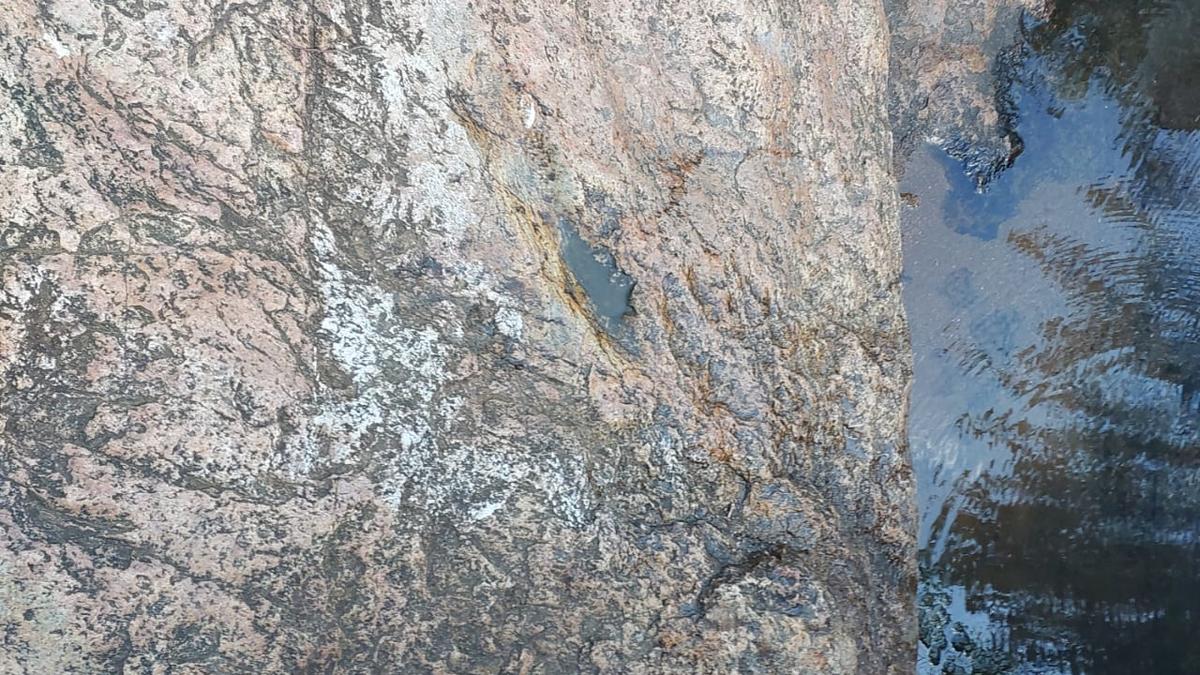
- 01 Jun 2025
In News:
The Archaeological Survey of India (ASI) has recently unearthed one of the first known Neolithic rock grooves in Kanniyakumari district, Tamil Nadu, specifically near Boothapandi village. These grooves—estimated to be around 4,000 years old—were likely created by Neolithic people to sharpen tools and weapons used for hunting, agriculture, and digging.
The discovery was made during a field study conducted by K. Hari Gopalakrishnan, ASI Officer (Tirunelveli &Kanniyakumari), and M. Faisal of the Sembavalam Research Centre. The grooves vary in size:
- Length: 8 cm to 15 cm
- Width: 3 cm to 4 cm
Such grooves have also been previously documented in Krishnagiri, Tiruvannamalai, and Villupuram districts of Tamil Nadu. The find strongly suggests the presence of Neolithic human activity in southernmost India and adds a significant layer to our understanding of prehistoric settlements in the region.
Neolithic Age
The Neolithic Age (New Stone Age) marks the final stage of prehistoric human evolution before the emergence of metal tools. Beginning around 10,000 BCE, it coincides with the Holocene Epoch and follows the Paleolithic Age (chipped-stone tools) and precedes the Bronze Age.
Key Features of the Neolithic Age
- Lifestyle Shift: Transition from hunting-gathering to agriculture and animal domestication.
- Permanent Settlements: Emergence of village communities with mud-and-reed houses, both rectangular and circular in design.
- Toolmaking: Development of polished and ground stone tools.
- Crafts and Culture: Rise of pottery, weaving, alcohol production, and early architecture.
- Burial Practices: Use of status objects (e.g., jade, pottery) in burials indicates belief in afterlife and emerging social hierarchies.
- By the end of the Neolithic era, copper metallurgy began, marking the Chalcolithic (Copper-Stone) Age. Eventually, bronze tools replaced stone ones, signaling the end of the Stone Age and the dawn of early civilizations.
Major Neolithic Sites in India
- Burzahom – Kashmir
- Chirand (Chiron) – Bihar
- Uttarapalli – Andhra Pradesh
- Edakkal Caves – Kerala
- Boothapandi (newly identified) – Tamil Nadu
Perito Moreno Glacier
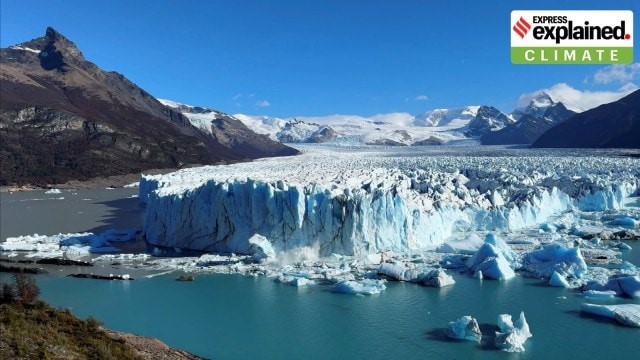
- 01 Jun 2025
In News:
- The Perito Moreno Glacier, often referred to as the ‘White Giant’, is Argentina’s most iconic glacier, located in the Los Glaciares National Park, a UNESCO World Heritage Site.
- Situated in the Andes Mountains, near El Calafate in Santa Cruz province, this glacier spans approximately 250 sq km—about the size of Patna, Bihar—and stretches 30 km in length, with ice walls rising 60 meters above water.
- Formed during the last Ice Age (~18,000 years ago), Perito Moreno has historically remained unusually stable, defying the global trend of rapid glacier retreat. However, this stability changed around 2020, raising alarms among scientists.
Recent Developments and Ice Calving Events
- Perito Moreno is globally renowned for its ice calving events, where massive blocks of ice break off into the lake with thunderous crashes. These events, though natural due to the glacier’s forward motion, have recently become more intense.
- On April 21, 2025, a colossal ice chunk the size of a 20-story building plunged 70 meters into the water—an increasingly frequent occurrence in the past 4–6 years.
- According to local experts and a 2024 government-backed report, the glacier has been retreating steadily since 2015, with an average mass loss of 0.85 meters annually—the fastest in nearly five decades.
- Between 2020 and 2023, the glacier lost over 700 meters of mass, equivalent to around seven large ice blocks.
Causes: Global Warming & Climate Impact
- The primary cause behind this dramatic retreat is climate change. Scientists from IANIGLA (Argentine Institute of Glaciology and Environmental Sciences) and CONICET state that the region has experienced an air temperature rise of 0.06°C per decade and reduced precipitation, leading to less snow accumulation and thinning of the glacier.
Global Perspective on Glacier Retreat
Perito Moreno is now part of a larger, alarming global trend.
- A 2024 study in Nature estimates that glaciers worldwide are losing 273 billion tonnes of ice annually, contributing to a 2 cm rise in global sea levels this century alone.
- A UNESCO report (March 2025) highlighted that glaciers (excluding Greenland and Antarctica) have shed over 9,000 billion tonnes of ice since 1975—comparable to an ice block the size of Germany with 25 meters thickness.
Environmental Significance
- Freshwater Source: Perito Moreno is a major reservoir of freshwater in Argentina.
- Tourism: The glacier attracts global tourists, boosting the local economy.
- Climate Indicator: Its recent retreat reflects the delayed but accelerating impact of global warming, making it a critical environmental bellwether.
INS Varsha
- 08 Apr 2025
In News:
India is set to operationalise INS Varsha, its first dedicated base for nuclear-powered submarines, by 2026. Located near Rambilli, about 50 km south of Visakhapatnam, Andhra Pradesh, this high-security facility is part of the classified Project Varsha, aimed at strengthening India’s maritime and nuclear deterrence capabilities in the Bay of Bengal and Indian Ocean Region (IOR).
Key Features:
- Strategic Location: Near deep waters of the Bay of Bengal, facilitating stealthy submarine movement and minimizing detection.
- Infrastructure:
- Underground pens and tunnel systems to conceal and protect nuclear submarines.
- Inner and outer harbour facilities; inner harbour completed, work ongoing on breakwaters and jetties.
- 20 sq. km area, capacity to house at least 10–12 nuclear submarines.
- Stealth Capabilities: Similar to China’s Hainan base, it offers satellite-evasion advantages, crucial for the survivability of SSBNs (nuclear-powered ballistic missile submarines).
- Support Facilities: Proximity to BARC Atchutapuram for nuclear infrastructure, enabling swift integration and maintenance of strategic assets.
- Geopolitical Role: Counters Chinese dual-use naval infrastructure at Hambantota (Sri Lanka) and BNS Sheikh Hasina (Bangladesh).
Strategic Significance:
- Enhances second-strike capability, vital for nuclear deterrence under India's nuclear triad.
- Enables undetected deterrent patrols by SSBNs, ensuring survivability in case of counterforce attacks.
- Facilitates rapid access to key chokepoints, especially the Strait of Malacca.
India’s Expanding Nuclear Submarine Fleet
INS Aridhaman – Third SSBN:
- Scheduled for commissioning in 2025.
- 7,000-tonne displacement, more capable than predecessors INS Arihant and INS Arighat.
- Equipped with K-4 Submarine-Launched Ballistic Missiles (SLBMs) with a range of 3,500 km.
- Built under the Advanced Technology Vessel (ATV) project by Shipbuilding Centre, Visakhapatnam, with BARC and DRDO support.
- Designed for long-duration deterrent patrols in deep sea.
Future Developments:
- India launched its fourth SSBN in November 2024, with ~75% indigenous content.
- Plans underway for even larger SSBNs and the construction of six nuclear-powered attack submarines (SSNs), starting with two approved 9,800-tonne SSNs for conventional strike and escort roles.
Related Naval Expansion – Project Seabird (Karwar Base):
- Located on the western coast, expanding to accommodate 50 warships and submarines, plus 40 auxiliary vessels.
- Will include a dual-use air station, new dockyard, and multiple dry berths.
WMO Climate Forecast 2025–2029
- 30 May 2025
In News:
The World Meteorological Organization (WMO) has released its latest decadal climate forecast (2025–2029), warning of a continued trend of record-breaking global temperatures. This projection raises serious concerns about climate risks, sustainable development, and international climate commitments under the Paris Agreement.
Key Projections:
- Annual Global Temperature Rise: Each year from 2025–2029 is projected to be 1.2°C to 1.9°C above pre-industrial levels (1850–1900).
- Record Heat Likelihood:
- 80% chance that at least one year will surpass 2024, currently the warmest year on record.
- 86% probability that one year will exceed the 1.5°C threshold.
- Five-Year Mean Warming: 70% chance that the 2025–2029 average will be above 1.5°C, a sharp rise from 47% (2024–2028) and 32% (2023–2027).
Note: The Paris Agreement’s 1.5°C limit refers to long-term (20-year) averages, but short-term overshoots are now increasingly probable.
Regional and Thematic Insights:
1. Arctic Amplification: Arctic winters (Nov–Mar) are projected to be 2.4°C warmer than the 1991–2020 average—3.5× faster than the global rate.
2. Sea Ice Decline: Continued sea ice reduction is expected in the Barents Sea, Bering Sea, and Sea of Okhotsk, impacting marine biodiversity and indigenous livelihoods.
3. Precipitation Variability:
- Wetter-than-average conditions likely in:
- Sahel region
- Northern Europe
- Alaska and Northern Siberia
- Drier conditions expected over:
- Amazon Basin
- Parts of South Asia
South Asia may witness generally wet years, though seasonal variability will persist.
Impact and Implications:
- Extreme Weather Events: Increased warming will fuel more intense heatwaves, extreme rainfall, droughts, and floods, stressing both urban systems and agriculture.
- Cryosphere and Ocean Changes:
- Accelerated glacier and sea ice melt will raise sea levels.
- Ocean heating contributes to acidification and marine biodiversity loss.
- Threat to Sustainable Development: Progress on SDGs, particularly food security, water availability, and health, is at risk in vulnerable regions.
Way Forward:
- Revise NDCs at COP30: Strengthen and align Nationally Determined Contributions (NDCs) with the 1.5°C goal.
- Accelerate Clean Energy Transition: Promote renewables, energy efficiency, and net-zero strategies to reduce GHG emissions.
- Adaptation and Resilience: Invest in climate-resilient infrastructure and early warning systems.
- Climate Monitoring & Forecasting: Enhance WMO-led regional forecasts and risk assessment tools.
- Preserve Natural Carbon Sinks: Protect forests, wetlands, and oceans to mitigate atmospheric CO?.
Tamil Nadu’s Space Industrial Policy and IN-SPACe
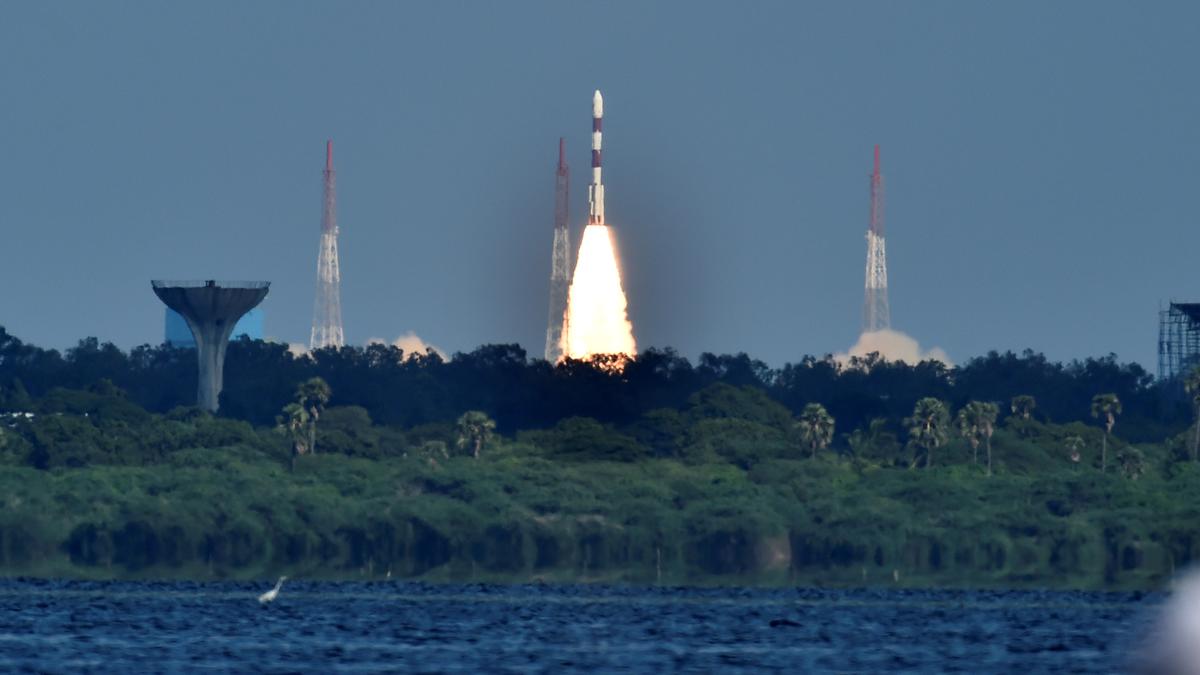
- 26 May 2025
In News:
Recently, the Tamil Nadu Cabinet approved its Space Industrial Policy, becoming the third state after Karnataka and Gujarat to adopt a dedicated strategy to stimulate investments and innovation in the space sector. This move aligns with the national framework set by the Indian Space Policy 2023 and supports India's growing space economy.
IN-SPACe and its Role:
- IN-SPACe (Indian National Space Promotion and Authorisation Centre) is an autonomous, single-window agency under the Department of Space (DoS).
- Created as part of India’s space sector reforms, it promotes and authorises the participation of Non-Governmental Entities (NGEs) in space activities.
- Functions include:
- Supporting private entities in the development of launch vehicles, satellites, and space-based services.
- Facilitating access to ISRO infrastructure and co-development initiatives.
- Providing support for research, innovation, and educational collaboration.
- Headquartered at Bopal, Ahmedabad, it serves as the bridge between ISRO and private sector stakeholders.
- IN-SPACe encouraged Tamil Nadu to formulate the Space Industrial Policy to promote the state’s role in India’s space mission.
Tamil Nadu’s Strategic Space Assets:
- ISRO Propulsion Complex (IPRC), Mahendragiri (Tirunelveli): Engaged in testing cryogenic engines, liquid propulsion systems, and R&D activities.
- Second Spaceport at Kulasekarapattinam (Thoothukudi): Enhances satellite launch capacity, especially for small satellites and polar launches.
- Presence of space-tech startups in areas like:
- Reusable launch vehicles
- In-space manufacturing
- In-orbit refuelling
- Satellite data analytics
- Space Technology Incubation Centre (STIC) at NIT Trichy supports southern-region ISRO projects and academia-industry collaboration.
- Over 250 ISRO vendors operate in the state, creating a robust supply chain ecosystem.
Objectives of Tamil Nadu's Space Industrial Policy:
- Target investment: ?10,000 crore over the next 5 years.
- Employment generation: Estimated 10,000 direct and indirect jobs.
- Strengthens Tamil Nadu’s capabilities in:
- Electronics and precision manufacturing
- Strategic electronics and space-grade components
- Promotes integration of space technologies in governance (e.g., disaster management, fisheries, agriculture, health, transport).
Policy Incentives:
- Payroll subsidy for companies engaged in R&D or setting up Global Capability Centres.
- Space Bays: Select regions will be designated to offer structured incentive packages for investments below ?300 crore.
- Industrial housing incentive: 10% subsidy (capped at ?10 crore) for building residential facilities in space industrial parks.
- Green initiatives: 25% capital subsidy (capped at ?5 crore) for environmentally sustainable developments.
Institutional Support:
- TIDCO (Tamil Nadu Industrial Development Corporation) signed an MoU with IN-SPACe to facilitate:
- Manufacturing activities
- Strategic collaborations with private companies
- R&D and design-based projects in the space domain
Landmine and Cluster Munition Treaties
- 07 Apr 2025
In News:
In a major shift that challenges global disarmament efforts, NATO members Poland, Finland, and the three Baltic states—Estonia, Latvia, and Lithuania—have announced their withdrawal from the 1997 Ottawa Convention banning anti-personnel landmines. These countries cite growing security threats from Russia amidst the ongoing Russia-Ukraine war as the primary reason for exiting the treaty.
Ottawa Convention (1997)
- Objective: To prohibit the use, stockpiling, production, and transfer of anti-personnel landmines, and to mandate the destruction of existing stockpiles within four years.
- Adoption and Enforcement: Finalized in Oslo on 18 September 1997, it came into force on 1 March 1999.
- Scope: The treaty bans anti-personnel mines but not anti-vehicle mines.
- Membership: 164 states are party to the convention. However, major powers like the US, Russia, China, and India have not signed or ratified it.
- Humanitarian Impact:
- Over 80% of landmine victims are civilians (ICRC).
- Ukraine has been declared the most mined country in the world (UN, October 2024), with 1,286 civilian victims reported as of August 2024.
- Victim Assistance: The Convention includes obligations to assist mine victims, many of whom suffer permanent disabilities.
Motivations Behind Withdrawals
- The withdrawing countries argue that their security environment has fundamentally changed, especially with the threat of Russian aggression.
- They fear that any ceasefire in Ukraine might allow Russia to regroup and pose a direct threat to bordering nations.
- By exiting the convention, these states aim to achieve military parity with Russia, which is not a party to the treaty.
- Poland has already indicated interest in resuming landmine production.
Impact on Global Demining and Humanitarian Efforts
- The move risks reversing decades of global advocacy and humanitarian work.
- Compounding the problem, global demining efforts are under stress due to sharp US funding cuts. The US had been the largest donor, contributing over $300 million annually, or 40% of global demining funds (Landmine Monitor 2024).
- Though the US has resumed some humanitarian demining programs (March 2024), specific details remain limited.
Convention on Cluster Munitions (2008)
- Purpose: Bans the use, production, transfer, and stockpiling of cluster munitions.
- Mechanism: These weapons disperse bomblets over large areas, posing serious risks to civilians long after deployment.
- Membership: 112 state parties and 12 signatories.
- Recent Withdrawal: Lithuania has signaled its withdrawal from this treaty.
- Non-Signatories: India, the US, Russia, China, Ukraine, and Israel have not joined the convention due to strategic and military considerations.
- Recent Usage: In 2023, the US supplied cluster munitions to Ukraine as part of its defense against Russian invasion.
6th BIMSTEC Summit
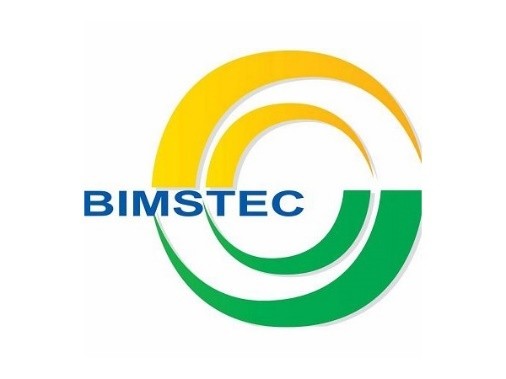
- 07 Apr 2025
In News:
The 6th BIMSTEC Summit was recently held in Bangkok, Thailand, under the theme “BIMSTEC: Prosperous, Resilient, and Open.”The Indian Prime Minister participated in the Summit, emphasizing regional connectivity, economic integration, and collective resilience.
About BIMSTEC
- Full Form: Bay of Bengal Initiative for Multi-Sectoral Technical and Economic Cooperation
- Members: Bangladesh, Bhutan, India, Myanmar, Nepal, Sri Lanka, and Thailand
- Founded: 1997 (Bangkok Declaration)
- Initial Name: BIST-EC (later BIMST-EC, and finally BIMSTEC in 2004)
- Population & Economy: Covers 1.7 billion people (~22% of world population) with a combined GDP of USD 5.2 trillion (2023)
Key Outcomes:
- Summit Declarations and Documents
- Bangkok Vision 2030: Adopted as a roadmap for regional economic integration, technological collaboration, and resilience against global challenges.
- 21-point Action Plan: Proposed by India to revitalize BIMSTEC as a dynamic platform for regional cooperation, especially in light of SAARC’s dormancy.
- Institutional and Governance Reforms
- Enforcement of the BIMSTEC Charter.
- Institutionalization of the Home Ministers' Mechanism, with India offering to host the first meeting.
- Strengthening mechanisms to counter terrorism, cybercrime, and human trafficking.
India’s Key Announcements and Initiatives
A. Centres of Excellence
India announced the establishment of BIMSTEC Centres of Excellence in:
- Disaster Management
- Sustainable Maritime Transport
- Traditional Medicine
- Agricultural Research and Training
B. Connectivity and Digital Infrastructure
- Operationalization of the BIMSTEC Energy Centre in Bengaluru.
- Proposal to link India’s UPI with BIMSTEC payment systems.
- Launch of a pilot study on Digital Public Infrastructure (DPI) for governance and service delivery.
C. Trade and Economic Integration
- Proposal to create a BIMSTEC Chamber of Commerce.
- Plan for an Annual Business Summit.
- Suggestion for a feasibility study on trade in local currencies.
D. Maritime and Space Cooperation
- Proposal for a Sustainable Maritime Transport Centre in India.
- Support for electric grid interconnection across member states.
- Space cooperation: development of nano-satellites, remote sensing data sharing, and training via a dedicated ground station.
Human Development and Cultural Engagement
- BIMSTEC for Organized Development of Human Resource Infrastructure (BODHI):
- Training for 300 youth annually.
- Scholarships (e.g., Nalanda University, Forestry Research Institute).
- Diplomatic training programs.
Health Sector
- Cancer Care Capacity Building Program for BIMSTEC countries.
Youth and Cultural Initiatives
- BIMSTEC Traditional Music Festival
- Young Leaders’ SummitandHackathon
- Young Professional Visitors Program
- BIMSTEC Athletics Meet (2025)
- BIMSTEC Games (2027)– to mark the 30th anniversary
India–Thailand Strategic Partnership (Announced on Sidelines)
Maritime and Regional Cooperation
- Strengthening ties via Indo-Pacific Oceans Initiative (IPOI) and ASEAN Outlook on Indo-Pacific (AOIP).
- Boosting connectivity via the India–Myanmar–Thailand Trilateral Highway.
Defence and Security
- Expansion of defence dialogues and joint military exercises (e.g., Exercise Maitree).
- Cooperation in cybersecurity, counter-terrorism, and intelligence sharing.
Economic and Trade Engagement
- Enhancing supply chain resilience, boosting bilateral trade, and exploring FTA upgradation.
Science and Innovation
- Joint ventures in renewable energy, space technology, and biotech innovation.
- Cooperation on digital public infrastructure.
Cultural Relations
- Promotion of Buddhist heritage, education exchanges, and tourism.
- Engagement with the Indian diaspora in Thailand.
Technology and Innovation Report 2025
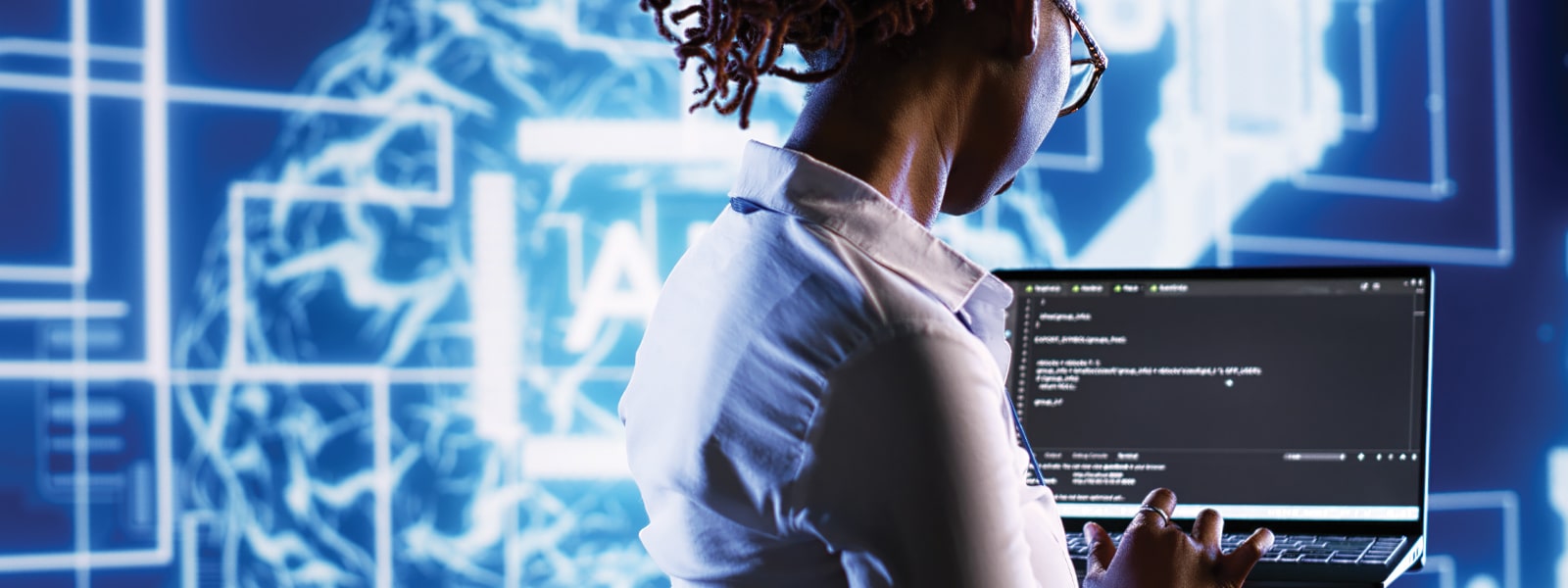
- 07 Apr 2025
In News:
India has been ranked 10th globally in terms of private sector investments in Artificial Intelligence (AI) in 2023, according to the Technology and Innovation Report 2025, released by the United Nations Conference on Trade and Development (UNCTAD). The report highlights the evolving global AI landscape and underscores India's growing role in frontier technologies.
About the Technology and Innovation Report
- Published by: UNCTAD (United Nations Conference on Trade and Development).
- Objective: To provide policy-relevant insights on emerging issues in science, technology, and innovation (STI), especially from the perspective of developing countries.
- Theme of the 2025 Edition: “Inclusive Artificial Intelligence for Development”.
- Purpose: Aims to assist policymakers in formulating inclusive and equitable STI policies amid the rapid expansion of AI technologies.
Key Highlights of the 2025 Report
- India’s Position:
- Ranked 10th globally for private AI investments, amounting to $1.4 billion in 2023.
- Among developing countries, only India and China feature prominently in global AI investments.
- India’s growing prominence reflects its rising technological capacity and startup ecosystem.
- Global Investment Trends:
- The United States led global AI investment with $67 billion (70% of global private investment).
- China ranked second with $7.8 billion.
- The report reveals that just 100 companies, mainly from the US and China, account for 40% of global private R&D investment in AI, signifying a concentration of technological power.
- AI and Global Employment:
- The report warns that up to 40% of global jobs could be influenced by AI-driven automation, necessitating adaptive policies, especially in the Global South.
- Governance Gaps:
- 118 countries, mostly from the Global South, are not participating meaningfully in global AI governance dialogues, highlighting a digital divide in international policy spaces.
- Recommendations for Developing Countries:
UNCTAD urges developing nations to strengthen three critical areas, termed “key leverage points”:- Infrastructure: Improve digital and physical infrastructure.
- Data Ecosystems: Ensure data accessibility, quality, and sovereignty.
- Human Capital and Skills: Invest in AI-related education and skilling.
- India’s Broader Performance:
- Ranked 36th out of 170 countries on the Readiness for Frontier Technologies Index 2024, an improvement from 48th in 2022.
Antimony Discovery in Balochistan, Pakistan
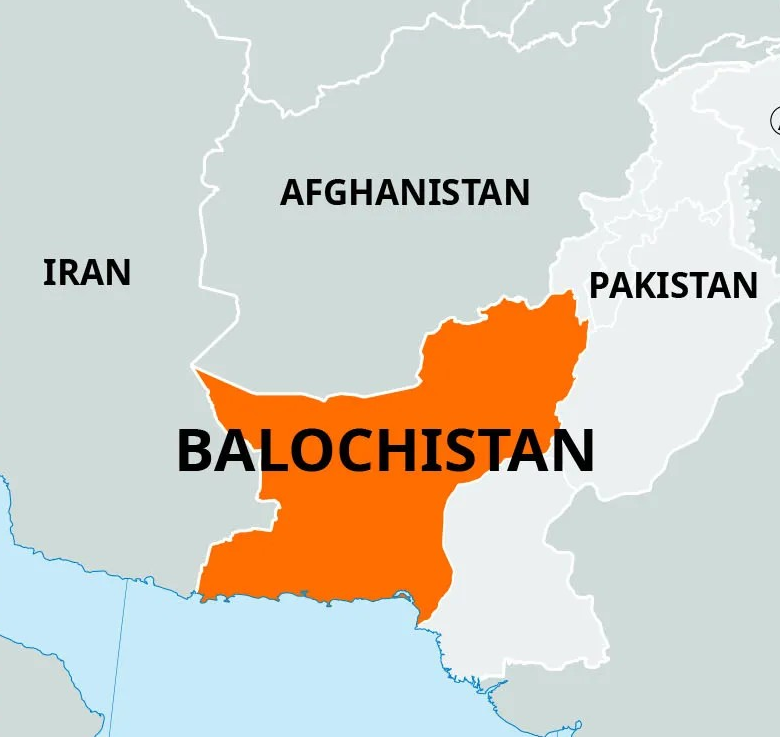
- 07 Apr 2025
In News:
In a recent geopolitical development, Pakistan has reportedly discovered a significant deposit of Antimony in the Balochistan region — an area marred by conflict and instability. This finding holds both economic and strategic significance, given the growing global demand for rare and critical minerals.
About Antimony
- Chemical Element: Antimony (Symbol: Sb, Atomic Number: 51) is a metalloid, meaning it exhibits properties of both metals and non-metals.
- Physical Properties:
- Solid at room temperature.
- Poor conductor of heat and electricity.
- Found in commercial forms such as ingots, broken pieces, granules, and cast cakes.
Geological Occurrence
- Primary Ore: The chief ore of Antimony is Stibnite (Sb?S?).
- Mode of Occurrence: Found in volcanic-associated deposits and deep-seated veins, formed under moderate to high temperature and pressure.
- Also commonly obtained as a byproduct from lead-zinc-silver mining operations.
Global Production Landscape
- China is the dominant global producer, accounting for over 88% of world production.
- Other notable producers include Russia, Bolivia, and Tajikistan.
- India currently does not have significant reserves or production of Antimony, making it dependent on imports for industrial use.
Key Industrial and Strategic Uses
- Electronics Industry:Used in manufacturing semiconductors, infrared detectors, and diodes.
- Alloys:
- Alloyed with lead and other metals to increase hardness and strength.
- Lead-antimony alloys are extensively used in lead-acid batteries.
- Defense and Printing:Utilized in the production of bullets, type metal for printing, and cable sheathing.
- Flame-Retardants and Ceramics:Antimony compounds are key ingredients in flame-retardant materials, as well as in paints, enamels, glass, and pottery.
Hansa-3 Trainer Aircraft
- 07 Apr 2025
In News:
In a significant milestone for India’s indigenous aviation sector, the Hansa-3 trainer aircraft has recently been approved for training aircrew for pilot licences. Notably, the production of this aircraft will now be undertaken by private industry, marking a step forward in India’s push for self-reliance in aviation technology and defence manufacturing.
About Hansa-3 Trainer Aircraft
- India’s First Indigenous Flying Trainer: The Hansa-3 is the country’s first indigenously developed light trainer aircraft.
- Developed by: The aircraft was designed and developed by the CSIR–National Aerospace Laboratories (NAL), Bengaluru, under the Council of Scientific and Industrial Research (CSIR).
- Intended Use: Specifically designed for flying clubs in India, it is well-suited for Commercial Pilot Licensing (CPL) training, owing to its cost-effectiveness and low fuel consumption.
Key Features and Technological Advancements
- Configuration: It is a two-seater, low-wing monoplane, optimized for pilot training missions.
- Engine: Powered by a Rotax Digital Control Engine, known for high efficiency and performance.
- Advanced Airframe: Incorporates Just-In-Time Prepreg (JIPREG) composite lightweight material, enhancing aerodynamic efficiency and reducing fuel use.
- Modern Cockpit: Equipped with a glass cockpit and bubble canopy, offering a wide panoramic view — critical for pilot situational awareness.
- Electronic Systems:
- Electric Flaps for improved handling.
- Advanced Electronic Fuel Injection System for automatic adjustment of fuel-air mixture across varying altitudes, enhancing performance and fuel economy.
Significance for India
- Promotes Atmanirbhar Bharat: The transition to private manufacturing aligns with the government’s vision of strengthening the domestic aerospace ecosystem under the Make in India initiative.
- Reduces Dependency: Reduces reliance on imported aircraft for pilot training, supporting India’s goal of strategic autonomy in aviation technology.
- Skill Development: Enhances the capacity of Indian flying schools and contributes to the growth of the civil aviation sector by producing more trained pilots domestically.
Kannadippaya
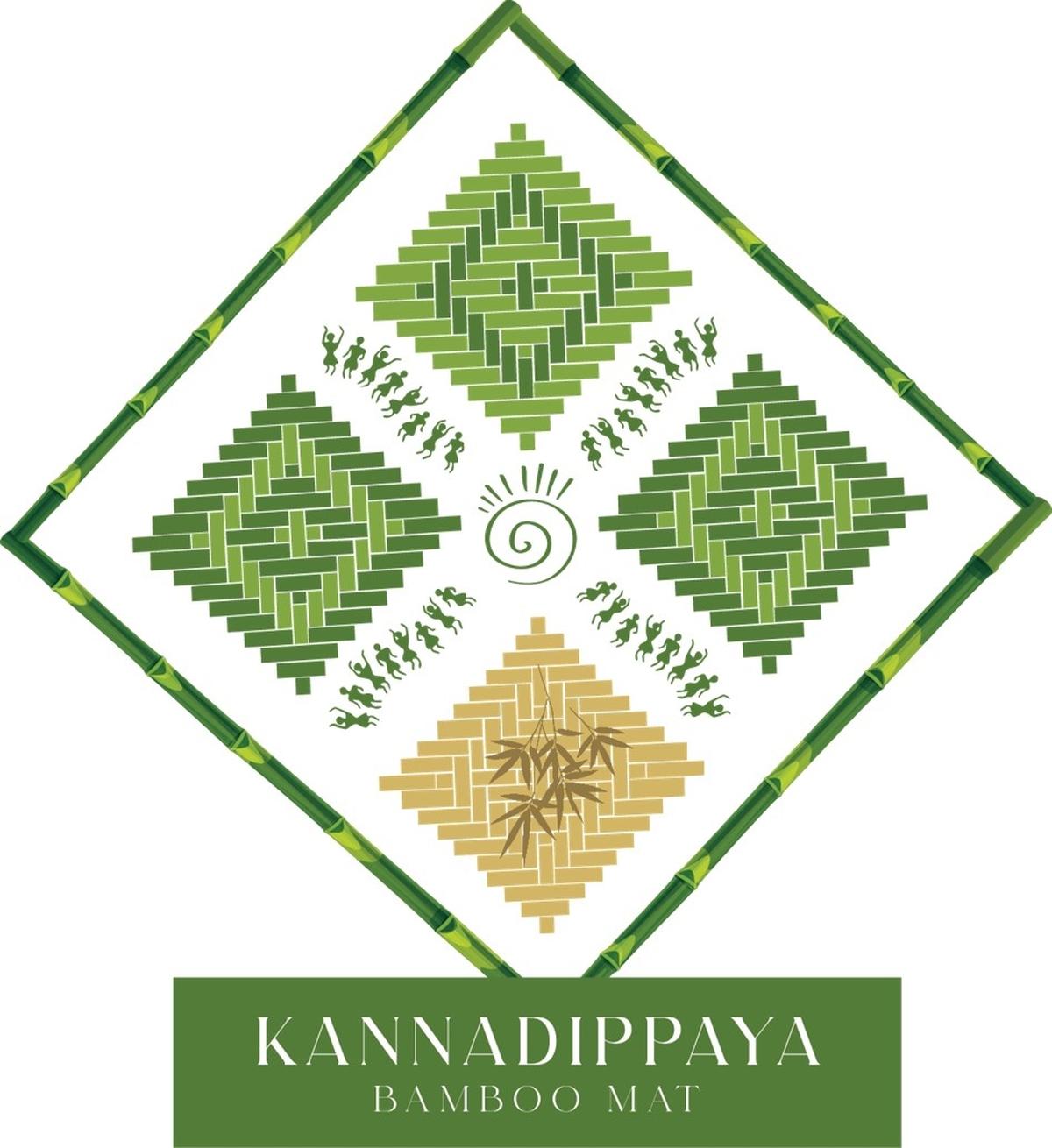
- 06 Apr 2025
In News:
The traditional tribal mat Kannadippaya from Kerala has been granted the Geographical Indication (GI) tag, marking a significant milestone in the protection and promotion of India’s tribal handicraft heritage.
About Kannadippaya
- Origin and Craftsmanship:Kannadippaya (literally, mirror mat) is a unique handicraft made by various tribal communities of Kerala, notably the Oorali, Mannan, Muthuvan, Malayan, Kadar, Ulladan, Malayarayan, and Hill Pulaya tribes. The craft is predominantly practiced in Idukki, Thrissur, Ernakulam, and Palakkad districts.
- Raw Material:The mat is woven using the soft inner layers of reed bamboo (Teinostachyumwightii) and other bamboo species such as Ochlandra sp., known locally by various names including Njoonjileetta and Kanjoora.
- Functional and Aesthetic Value:The mat’s reflective design gives it a mirror-like appearance. It offers thermal comfort by providing warmth during winter and cooling during summer, showcasing traditional ecological knowledge.
- Historical Significance:Historically, these mats were offered by tribal communities as a token of honour to kings, reflecting the cultural and symbolic value attached to the craft.
Significance of the GI Tag
- Cultural Recognition:Kannadippaya becomes Kerala’s first tribal handicraft to receive a GI tag, acknowledging its cultural uniqueness and heritage value.
- Economic Empowerment:The GI tag is expected to:
- Provide market protection for tribal artisans.
- Enable branding and certification, enhancing the product's authenticity.
- Open national and international markets, especially for eco-friendly, sustainable products.
- Encourage entrepreneurship among tribal communities, reducing dependency on intermediaries.
- Institutional Support:
- The Kerala Forest Research Institute (KFRI) played a pivotal role in securing the GI tag, along with contributions from experts.
- The application was supported by tribal cooperatives like UnarvuPattikavarghaVividodeshaSahakarana Sangam and Vanasree Bamboo Craft, Idukki.
Challenges and the Way Forward
- Lack of Structured Market:Artisans have highlighted the absence of a robust marketing ecosystem. There is a need for State and Central government interventions to:
- Facilitate marketing infrastructure and e-commerce platforms.
- Provide training and capacity-building for artisans.
- Encourage younger generations to take up the craft through incentives and education.
- Sustainability and Global Demand:Given the rising demand for eco-friendly and sustainable products globally, Kannadippaya has the potential to become a symbol of India’s green and inclusive development model.
Artificial Rain to combat Delhi’s Air Pollution
- 06 Apr 2025
In News:
With the national capital grappling with chronic air pollution every winter, the Delhi Government is exploring artificial rain (cloud seeding) as a potential mitigation strategy. In a recent high-level meeting chaired by Environment Minister Manjinder Singh Sirsa, experts and representatives from key institutions brainstormed the feasibility and logistics of implementing cloud seeding in Delhi's airspace.
What is Artificial Rain (Cloud Seeding)?
- Cloud seeding is a form of weather modification aimed at inducing rainfall.
- It involves spraying chemical agents such as silver iodide or salt particles into clouds to stimulate condensation and precipitation.
- Requires favourable meteorological conditions, especially adequate moisture and cloud density.
- Usually conducted using aircraft or ground-based dispersal systems.
Significance for Delhi:
- Rainfall helps settle airborne particulate matter (PM2.5 and PM10), thereby reducing pollution levels.
- Delhi’s air quality worsens in winter due to a combination of low wind speeds, crop residue burning, vehicular and industrial emissions, and construction dust.
- Artificial rain could serve as an emergency intervention to improve air quality during severe pollution episodes.
Key Highlights of the Meeting:
- Convened by Delhi Environment Department with participation from:
- CPCB, DPCC
- Ministry of Defence, MoEFCC
- IIT-Kanpur, India Meteorological Department (IMD)
- Directorate General of Civil Aviation (DGCA), AAI
- IIT-Kanpur scientists shared results from previous successful cloud seeding trials in Kanpur (2023), demonstrating its potential under ideal conditions.
- Past trials in 2018 also showed partial success, with rainfall occurring in 5 out of 6 attempts during pre-monsoon months.
Challenges Identified:
- Weather-dependence: Effectiveness relies heavily on cloud presence and moisture levels, which are limited in Delhi during winters.
- Airspace clearance and coordination among multiple agencies (civil aviation, defence).
- High costs and uncertain outcomes make it a supplementary, not primary, solution.
Complementary Measures Underway:
- Delhi’s 14-point action plan to curb dust pollution includes:
- Anti-smog guns, covering construction sites, cleaning of construction vehicles, andregulated debris disposal.
- Exploring static ionisation systems as an alternative to cloud seeding for artificial precipitation.
Mount Marapi Eruption
- 06 Apr 2025
In News:
In May 2025, Mount Marapi, one of Indonesia’s most active volcanoes, erupted, spewing a column of volcanic ash 1.5 km into the sky. The event has once again highlighted the seismic vulnerability of the Pacific Ring of Fire, where tectonic activity frequently triggers volcanic eruptions and earthquakes.
About Mount Marapi
- Location: Situated in the Padang Highlands of western Sumatra, Indonesia.
- Type: A stratovolcano (composite volcano), consisting of successive layers of lava, ash, and pyroclastic material.
- Elevation: Rises to 2,891 meters (9,485 feet) above sea level, making it the highest peak in the region.
- Summit Feature: Contains the Bancah caldera (approx. 1.4 km wide), with multiple overlapping craters.
- Tectonic Setting: Lies on the Pacific Ring of Fire, a highly seismically active zone encircling the Pacific Ocean.
- Notable Eruption: In 1979, a deadly eruption-induced lahar (volcanic mudflow) caused by intense rainfall resulted in 60 fatalities.
Seaweed Farming in India
- 06 Apr 2025
In News:
With growing attention on sustainable marine resources and coastal livelihood enhancement, the Government of India is promoting seaweed cultivation as part of its broader Blue Economy strategy. Recognized for its nutritional, economic, and ecological value, seaweed farming is emerging as a viable livelihood and environmental solution for India's coastal communities.
What is Seaweed?
Seaweed is a nutrient-rich marine plant that grows in shallow ocean waters. It is:
- Rich in vitamins, minerals, amino acids, and 54 trace elements.
- Known to aid in managing non-communicable diseases such as cancer, diabetes, cardiovascular ailments, and hypertension.
- Used in food, cosmetics, fertilizers, medicines, and industrial gelling agents like agar, alginate, and carrageenan.
Global Significance and Industry Potential
- The global seaweed market is valued at US$ 5.6 billion and projected to reach US$ 11.8 billion by 2030 (World Bank).
- Major consumers: Japan, China, and South Korea.
- India possesses vast untapped potential with over 7,500 km of coastline and 844 identified seaweed species, of which ~60 are commercially viable.
Seaweed and the Blue Economy in India
Government Initiatives:
- Pradhan Mantri MatsyaSampada Yojana (PMMSY) (launched in 2020):
- Total Outlay: ?20,050 crore.
- ?640 crore allocated for seaweed development (2020–25).
- Goal: Increase seaweed production to 1.12 million tonnes in five years.
- Projects funded:
- Multipurpose Seaweed Park in Tamil Nadu.
- Seaweed Brood Bank in Daman & Diu.
- Provision of 46,095 rafts and 65,330 monocline tubenets to farmers.
Supportive Regulatory Measures:
- Seaweed-based biostimulants regulated under the Fertilizer (Control) Order, 1985.
- Integrated with Paramparagat Krishi Vikas Yojana (PKVY) and MOVCDNER to promote organic farming.
Economic, Environmental & Social Benefits
Economic:
- Seaweed farming offers high returns — e.g., farming Kappaphycusalvarezii may yield up to ?13.28 lakh/hectare/year.
- Generates foreign exchange through exports of seaweed-based bio-products.
Environmental:
- Requires no land, freshwater, fertilizers, or pesticides.
- Absorbs CO?, combats ocean acidification, and enhances marine biodiversity.
Social:
- Provides alternative livelihoods for fishers.
- Particularly beneficial for women and youth, promoting inclusive growth in coastal regions.
Success Stories and Innovations
Women Empowerment in Tamil Nadu:
Four women from Mandapam, Tamil Nadu, trained under PMMSY, successfully cultivated seaweed, producing 36,000 tonnes despite cyclones and market challenges. Their venture created employment and inspired other women.
Tissue Culture Innovation:
The CSIR-Central Salt and Marine Chemicals Research Institute (CSIR-CSMCRI)developed tissue-cultured Kappaphycusalvareziiseedlings, leading to:
- 20–30% higher growth rates.
- Better carrageenan quality.
- Enhanced farmer productivity in Tamil Nadu’s coastal districts.
Challenges and Way Forward
Challenges:
- Vulnerability to climatic shocks (cyclones, salinity changes).
- Limited market access and value chain infrastructure.
- Need for increased awareness and skill-building in coastal areas.
Recommendations:
- Strengthen public-private partnerships and R&D for better cultivars.
- Expand seaweed farming cooperatives with financial inclusion mechanisms.
- Promote Blue Economy integration in coastal development policies.
Domestically Manufactured Iron & Steel Products (DMISP) Policy – 2025
- 06 Apr 2025
In News:
To address the rising steel imports and strengthen domestic industry under the Atmanirbhar Bharat initiative, the Government of India has notified the DMISP Policy – 2025, mandating the exclusive use of Indian steel in government procurement and incorporating a reciprocity clause against non-cooperative foreign countries.
About the DMISP Policy – 2025
- Nodal Ministry: Ministry of Steel
- Aim:To promote the use of domestically produced iron and steel in government-funded projects, thereby reducing import dependence, enhancing self-reliance, and safeguarding the interests of the Indian steel industry.
- Key Objectives
- Promote Self-Reliance: Advance the vision of Atmanirbhar Bharat by boosting domestic steel production and consumption.
- Curb Imports: Mitigate the adverse impact of rising steel imports on Indian steelmakers.
- Support Domestic Industry: Provide a level playing field to Indian steel manufacturers in public procurement.
- Encourage Value Addition: Increase domestic sourcing and manufacturing of capital goods used in steel production.
Salient Features of the Policy
- Mandatory Use of Indian Steel:
- Applicable across all Union Ministries, PSUs, statutory bodies, and trusts.
- Covers products such as flat-rolled steel, rods, bars, and rails.
- Steel must meet the “Melt and Pour” condition — i.e., must be melted and solidified in India.
- Reciprocity Clause:
- Nations that restrict Indian firms from participating in their public procurement (e.g., China) are barred from Indian government tenders.
- Exceptions can be made only with the approval of the Ministry of Steel.
- Ban on Global Tenders (GTE):
- GTEs for steel products are prohibited.
- GTEs for capital goods (e.g., furnaces, rolling mills) are permitted only for contracts above ?200 crore, with prior clearance.
- Domestic Value Addition Requirement:
- Capital goods used in steel production must have at least 50% local value addition.
- Certification by statutory or cost auditors is mandatory.
- Procurement Applicability:
- Mandatory for all government procurement above ?5 lakh.
- Also extends to centrally funded but state-executed projects.
- Monitoring and Enforcement:
- A Standing Committee chaired by the Secretary (Steel) will:
- Oversee compliance and redress grievances.
- Grant exemptions in case of non-availability of Indian products.
- A Standing Committee chaired by the Secretary (Steel) will:
- Penalties for Non-Compliance:False declarations may result in blacklisting of suppliers and forfeiture of earnest money deposits.
Transiting Exoplanet Survey Satellite (TESS)

- 05 Apr 2025
In News:
- An international team of astronomers, using NASA’s TESS mission, has discovered a new warm Jupiter-type exoplanet located over 1,000 light-years away.
- “Warm Jupiters” are gas giants that orbit their stars at moderate distances, experiencing higher temperatures than Jupiter but cooler than “hot Jupiters”.
About TESS (Transiting Exoplanet Survey Satellite)
- Launched: March 2018 by NASA.
- Objective: To discover thousands of exoplanets (planets outside our solar system) by observing the brightest dwarf stars in the sky.
- Successor to: NASA’s Kepler Space Telescope, which pioneered large-scale exoplanet discovery (2009–2018).
Working Principle:
- TESS uses the transit method:
- It monitors periodic dips in star brightness, caused when a planet crosses (or transits) in front of its host star.
- This reveals the size (diameter) of the exoplanet and helps estimate its orbital characteristics.
- Helps identify habitable zone planets, where liquid water may exist on Earth-like worlds.
Mission Highlights:
- Prime Mission Duration: Two years, completed on July 4, 2020.
- Covered nearly 75% of the sky, divided into 26 sectors.
- Discovered 66 confirmed exoplanets during the prime mission.
- Now operating under an extended mission, continuing to explore distant planetary systems.
- Finds planets of varied sizes and compositions, from rocky Earth-like bodies to gas giants.
Heard and McDonald Islands
- 05 Apr 2025
In News:
Donald Trump has imposed a 10% tariff on imports from the Heard and McDonald Islands.
Geographical Context
- Heard Island and McDonald Islands (HIMI) are remote, sub-Antarctic volcanic islands in the southern Indian Ocean, situated:
- ~4,100 km southwest of Perth (Australia),
- ~1,600 km north of the Antarctic coast.
- They are one of Australia’s seven external territories, administered directly by the Australian government.
Physical and Ecological Significance
- Volcanically active: Home to Big Ben (2,745 m, Mawson Peak), Australia’s highest mountain outside the mainland and Tasmania.
- McDonald Island has expanded due to recent eruptions in the 1990s and 2000s.
- Only volcanically active sub-Antarctic islands, making them valuable for studying:
- Earth’s crustal processes,
- Glacial dynamics,
- Oceanic and atmospheric changes.
- Designated as a UNESCO World Heritage Site (1997) and classified under IUCN Category Ia (Strict Nature Reserve).
Biodiversity
- Inhabited by marine birds and mammals like:Penguins, elephant seals, and seabirds.
- Notable for being free from invasive species, aiding biodiversity and evolutionary research.
- Largely uninhabited by humans; no known permanent population.
US Tariff Controversy
- The US President (Donald Trump) imposed a 10% tariff on imports from HIMI—despite the islands having no known exports or trade with the US.
- The islands have no recent human presence and are mainly home to wildlife.
- Other Australian external territories targeted by similar tariffs include:
- Norfolk Island – 29% tariff despite limited economic activity.
- Cocos (Keeling) Islands and Christmas Island – 10% tariff.
- The British Indian Ocean Territory (BIOT), including Diego Garcia, also faced a 10% tariff. Diego Garcia hosts a US-UK military base, with no civilian population.
Saturn becomes undisputed 'Moon King' of Solar System
- 05 Apr 2025
In News:
In a major astronomical breakthrough, scientists have discovered 128 new moons orbiting Saturn, raising its total confirmed moon count to 274—the highest for any planet in the solar system. This discovery has been officially recognized by the International Astronomical Union (IAU).
About the Discovery
- The moons were detected using the Canada-France-Hawaii Telescope with a method called “shift and stack”, which enhances the visibility of faint objects moving across the sky.
- Most of the newly identified moons are irregular, small, and non-spherical, indicating a likely origin as captured asteroids or remnants of larger celestial bodies.
- Their clustered orbits suggest a history of violent collisions or fragmentation, possibly linked to the chaotic early evolution of the solar system.
Significance
- Confirms Saturn’s status as the planet with the most known moons, overtaking Jupiter (95 moons as of 2024).
- Enhances understanding of planetary formation, orbital dynamics, and the evolution of ring and satellite systems.
- May contribute to refining the scientific definition of a moon and deepen knowledge of irregular satellite formation in gas giants.
Key Facts about Saturn
- Position: Sixth planet from the Sun.
- Size: Second-largest planet after Jupiter.
- Type: Gas giant composed mainly of hydrogen and helium, with traces of methane and ammonia.
- Density: Approximately 0.69 g/cm³, the only planet less dense than water.
- Shape: Oblate due to rapid rotation—flattened at poles, bulging at the equator.
- Rings: Made of ice, dust, and rocky debris.
- Orbit: About 9.59 AU (1,434 million km) from the Sun; orbital period ~29.45 Earth years.
- Weather: Hosts extreme storms like the Great White Spot, recurring roughly once every Saturnian year (~29 Earth years).
Important Moons of Saturn
Titan
- Largest moon of Saturn and second-largest in the solar system, larger than Mercury.
- Only moon with a dense atmosphere, rich in nitrogen and methane.
- Features liquid hydrocarbon lakes near the poles.
- Explored by Cassini-Huygens mission; lander touched down in 2005.
Enceladus
- An icy moon with a subsurface liquid ocean.
- Known for its highly reflective surface and water-ice geysers.
- Cassini (2005) observed plumes of water vapor ejecting at ~400 m/s.
- Discovery of silica nanograins suggests hydrothermal activity, making it a prime target in the search for extraterrestrial life.
Mitathal and Tighrana: Newly Protected Harappan Sites in Haryana
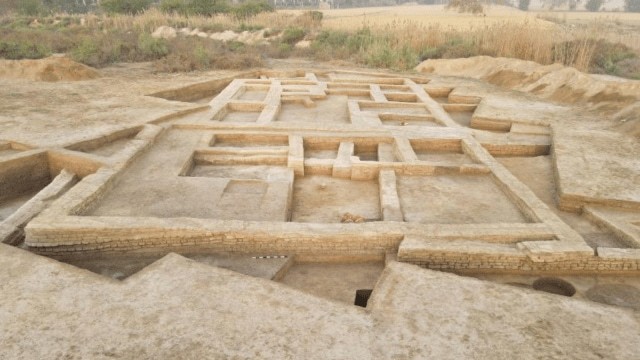
- 05 Apr 2025
In News:
The Haryana Government has declared Mitathal and Tighrana, two historically significant Harappan civilisation sites in Bhiwani district, as protected archaeological sites under the Haryana Ancient and Historical Monuments and Archaeological Sites and Remains Act, 1964.
Location and Legal Status
- Both sites are located in Mitathal and Tighrana villages of Bhiwani district, Haryana.
- The notification was issued on March 13, 2025, designating a 10-acre area at Mitathal for protection.
- The Heritage and Tourism Department will ensure preservation through site fencing and deployment of guards.
Mitathal Site: Key Highlights
- Period: Dates to the Copper-Bronze Age, roughly 3rd to 2nd millennium BCE.
- Archaeological Finds:
- Well-baked red pottery with black painted motifs like pipal leaves and fish scales.
- Beads, copper tools, bangles, terracotta, and bone artefacts.
- Historical Timeline:
- First identified in 1913 through Samudragupta coins.
- Systematic excavations began in 1965–68 and continued post-2016 by the Central University of Haryana.
- Cultural Features:
- Reflects urban planning and craftsmanship typical of the Harappan Civilization.
Tighrana Site: Cultural Significance
- Chronology: Rich in pre-Harappan, Harappan, and post-Harappan layers.
- Inhabitants: Associated with Sothian culture – early Chalcolithic farming communities (~2400 BCE).
- Settlement Traits:
- Mud-brick houses, some possibly fortified.
- Use of bichrome wheel-made pottery (black and white designs).
- Artefacts:Green carnelian bangles, beads, and tools suggest a thriving bead and jewellery industry.
Archaeological and Cultural Importance
- Continuity of Settlement: Offers insight into continuous human occupation from Pre-Siswal to Post-Harappan periods.
- Socio-economic Insights:Demonstrates early agricultural practices, urban planning, and craft traditions in the Indo-Gangetic divide.
Background: Harappan Civilization
- Also known as the Indus Valley Civilization (IVC); flourished around 2500 BCE.
- One of the world’s oldest urban civilizations, alongside Mesopotamia, Egypt, and China.
- Classified as Bronze Age due to artefacts made from copper-based alloys.
- Key excavations:
- Harappa (1921–22) by Daya Ram Sahni.
- Mohenjo-daro (1922) by R.D. Banerji, under supervision of Sir John Marshall (ASI).
Euphaeawayanadensis

- 05 Apr 2025
In News:
A new species of damselfly, Euphaeawayanadensis, has been discovered in the Wayanad region of Kerala, marking a significant addition to India’s odonate diversity.
Key Details:
- Taxonomy:
- Belongs to the family Euphaeidae.
- Officially recognized as Kerala’s 191stodonate species (including damselflies and dragonflies).
- 223rd species recorded from the Western Ghats.
- Discovery and Research:
- First observed in 2013 at Kalindi River, Thirunelli, Wayanad.
- Confirmed after field studies conducted until 2023 across Wayanad, Aralam (Kannur), and western Coorg slopes (Karnataka).
- Discovery published in the peer-reviewed journal ENTOMON.
- Research Contributors:Collaborative effort involving scientists from Kerala Agricultural University, Alphonsa College, and conservation groups like Warblers and Waders, Travancore Nature History Society.
- Identification Process:
- Initially mistaken for Euphaeapseudodispar (from Maharashtra).
- Declared a distinct species based on morphological traits and genetic analysis.
Distinct Morphological Features
- Hind wing: Longer black patch compared to similar species.
- Stripes: Broader, uninterrupted humeral and antehumeral stripes in males.
- Male genital vesicle: Structurally unique from related species.
Habitat & Distribution
- Inhabits fast-flowing rocky streams with aquatic vegetation.
- Found in evergreen and semi-evergreen forests along stream banks.
- Active throughout the year except March–April (dry season).
- Shows restricted distribution, making it ecologically vulnerable.
Conservation Importance
- The discovery underlines the biodiversity richness of the Western Ghats.
- Highlights the need for targeted conservation of aquatic invertebrates in fragile ecosystems like Wayanad.
- Emphasised by experts from the IUCN Dragonfly Specialist Group.
Chandra’s Surface Thermophysical Experiment (ChaSTE)
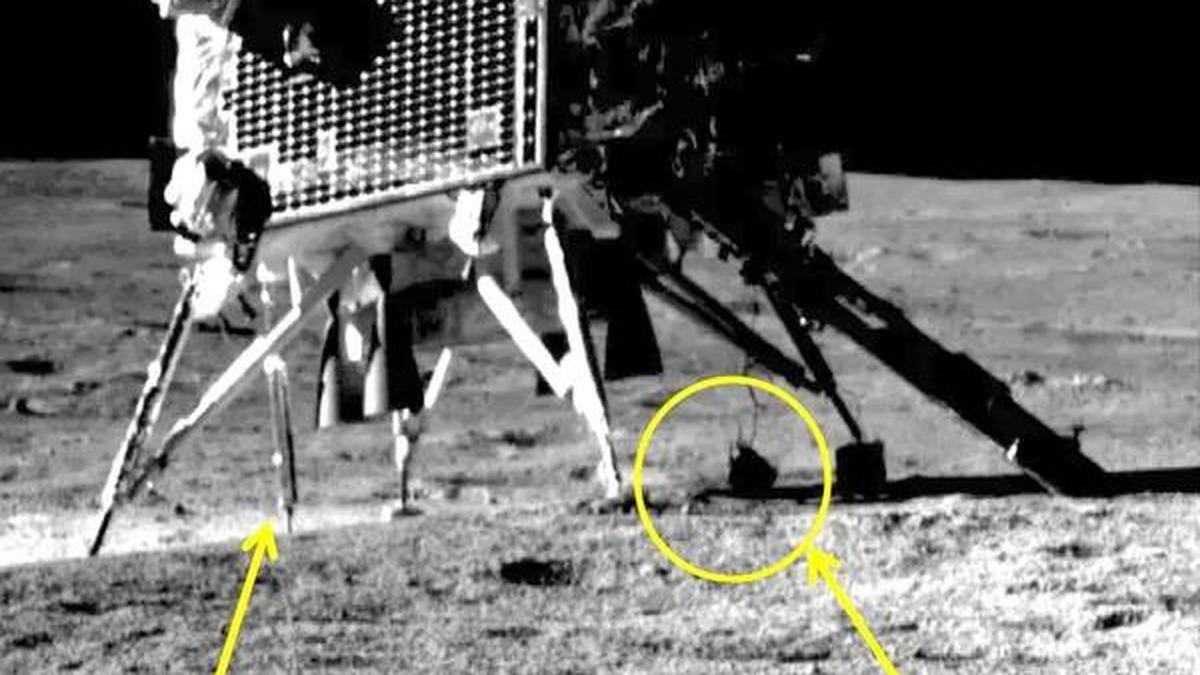
- 04 Apr 2025
In News:
India’s Chandrayaan-3 mission, which successfully landed on the Moon’s south polar region on August 23, 2023, achieved a global first with its Chandra’s Surface Thermophysical Experiment (ChaSTE) — the first thermal probe to successfully penetrate the soil of a celestial body and measure subsurface temperatures in situ.
About ChaSTE:
- Full form: Chandra’s Surface Thermophysical Experiment.
- Part of: Vikram lander (Chandrayaan-3).
- Depth achieved: Successfully tunnelled10 cm into the lunar regolith.
- Duration of operation: From August 23 to September 2, 2023.
- Significance: First successful deployment of a thermal probe into extraterrestrial soil.
Key Features:
- Temperature sensors: 10 sensors spaced 1 cm apart near the probe’s tip.
- Deployment mechanism: Unique rotation-based system — unlike previous missions that used hammering mechanisms.
- Measurement technique: Monitored changes in motor resistance and tip temperature to determine soil contact and depth.
Scientific Outcomes:
- Provided direct temperature profiles of lunar subsurface near the south pole.
- Enabled insights suggesting greater-than-expected presence of water ice beneath the surface.
Comparison with Previous Attempts:
Mission Agency Celestial Body Instrument Outcome
Rosetta – Philae (2014) ESA Comet 67P MUPUS Deployment failed due to
landing bounce
InSight (2018) NASA Mars HP3 ("The Mole") Could not collect data;
probe failed to burrow
as intended
Chandrayaan-3 (2023) ISRO Moon ChaSTE Successful soil
penetration and
temperature measurement
- Innovation Edge: Unlike ESA’s and NASA’s hammer-based devices, ChaSTE used a rotating drill, allowing steady penetration despite lunar soil resistance.
- Developed by the Physical Research Laboratory (PRL), Ahmedabad.
INSV Tarini at Cape Town
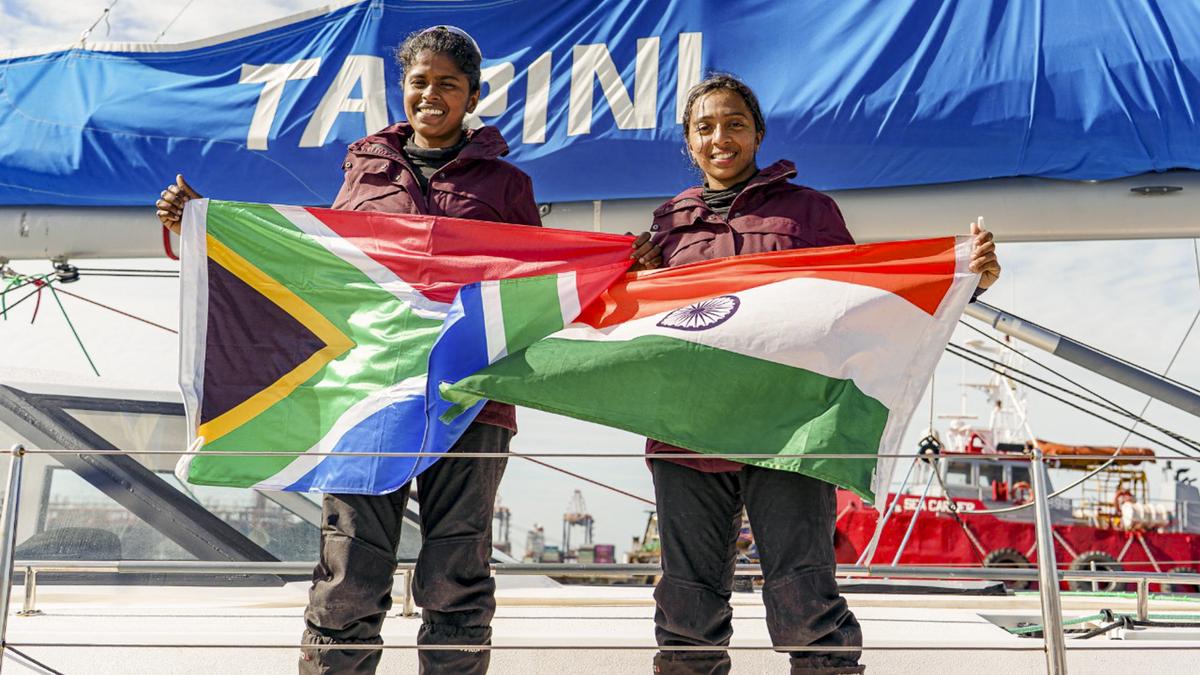
- 04 Apr 2025
In News:
The Indian Naval Sailing Vessel (INSV) Tarini, crewed by women officers Lt CdrDilna K. and Lt Cdr Roopa A., reached Cape Town, South Africa, marking the final international port in the Navika Sagar Parikrama II — a global circumnavigation mission by the Indian Navy.
About INSV Tarini:
- Type: 56-foot indigenously built sailing vessel.
- Commissioned: February 2017.
- Builder:Aquarius Shipyard Ltd., Goa, under the Make in India initiative.
- Features:
- Equipped with Raymarine navigation suite, satellite communication systems, and emergency steering.
- Designed to operate in extreme maritime conditions.
- Name Origin: Named after the Tara-Tarini hill shrine in Odisha; ‘Tarini’ in Sanskrit means “boat” and “saviour.”
Navika Sagar Parikrama II:
- Flagged off from Goa: October 2, 2024, by Admiral Dinesh K. Tripathi, Chief of the Naval Staff.
- Duration: ~8 months.
- Total distance: Approx. 23,400 nautical miles (43,300 km).
- Route across three oceans, rounding three major capes.
- Ports of call before Cape Town:
- Fremantle (Australia)
- Lyttelton (New Zealand)
- Port Stanley (Falkland Islands, UK)
Challenges Faced:
- Extreme weather: Winds > 50 knots (93 km/h), waves up to 7 metres.
- Rough seas and cold temperatures posed significant navigational challenges.
Significance:
- Demonstrates India’s commitment to women-led maritime expeditions.
- Strengthens India–South Africa naval cooperation:
- October 2024: INS Talwar participated in Exercise IBSAMAR.
- January 2025: INS Tushil made a port call at Durban.
Protection of Interests in Aircraft Objects Bill, 2025

- 04 Apr 2025
In News:
The Protection of Interests in Aircraft Objects Bill, 2025, recently passed by the Rajya Sabha, aims to implement two key international agreements in India’s legal framework:
- Cape Town Convention on International Interests in Mobile Equipment (2001)
- Protocol to the Convention on Matters Specific to Aircraft Equipment
Objective:
To provide legal clarity and security to stakeholders in the aviation leasing industry by integrating global standards into Indian law.
Background:
- India became a signatory in 2008 after Cabinet ratification in 2007.
- The Cape Town Convention addresses complex issues of cross-border leasing and financing of high-value mobile assets like aircraft, helicopters, and engines.
- With over 86.4% of India's 840 commercial aircraft under leasing arrangements, there was an urgent need for a dedicated legal framework.
Key Provisions:
- Directorate General of Civil Aviation (DGCA) is designated as the registry authority.
- Responsible for registration and deregistration of aircraft.
- Creditors must notify the DGCA prior to initiating recovery actions in case of defaults.
- In case of default by airlines:
- Creditors can reclaim aircraft or related equipment within two months, or as per a mutually agreed period.
- Lessors and airlines are required to regularly inform the DGCA about dues and lease activities.
- The central government is empowered to make rules for the implementation of the convention and protocol.
Expected Benefits:
- Enhances legal protection for creditors and lessors.
- Reduces leasing costs by an estimated 8–10%, potentially lowering airfares for consumers.
- Encourages the growth of a domestic aircraft leasing industry, reducing dependence on foreign jurisdictions like Ireland, Singapore, and Dubai.
Civil Aviation Minister’s Remarks:
- The Bill addresses a long-standing legislative vacuum.
- It will bolster investor confidence and attract leasing businesses to India.
- Airfare regulation remains complex and is influenced by multiple factors including fuel prices, leasing charges, and maintenance costs.
India’s Agricultural Trade Dilemma
- 04 Apr 2025
In News:
India faces growing global pressure to liberalise its agricultural markets amidst trade negotiations, FTAs, and WTO commitments. At the same time, ensuring food security and protecting rural livelihoods remains a domestic priority.
Benefits of Global Trade Integration
- Export Revenue Growth: Enhanced access to global markets has increased agri-exports.E.g., India’s agricultural exports to the US were worth $8.4 billion.
- Technology & Investment Inflow: FTAs can attract agri-tech innovations and cold-chain infrastructure.E.g., partnerships with developed nations enable modernisation of storage and logistics.
- Market Efficiency: Global competition improves price discovery and benefits quality producers.
- Geopolitical Leverage: Trade agreements strengthen India’s role in forums like the WTO and BRICS.
- Input Security via Diversified Imports: Import of essentials like palm oil and fertilisers protects supply chains. E.g., Indonesia’s 2022 palm oil export ban highlighted India’s vulnerability.
Importance of Domestic Food Security
- Rural Livelihoods: Agriculture employs ~42% of the workforce, primarily small and marginal farmers.Over 100 million dairy farmers depend on protective tariffs.
- Nutrition and Price Stability: Domestic self-sufficiency guards against global price shocks.
- Reduced Import Dependence: A strong domestic base cushions India during crises.E.g., Ukraine war caused a spike in fertiliser prices, exposing dependency.
- Political and Strategic Stability: Ensures rural harmony and policy autonomy.
Challenges of Trade Liberalisation
- Subsidy Imbalances: Developed nations offer massive farm subsidies.E.g., US farm aid of $10 billion distorts global price competitiveness.
- FTA Pressures: Demands from countries like New Zealand to lower dairy tariffs threaten Indian farmers.
- WTO Constraints: India’s MSP system faces scrutiny under global trade rules.
- Illegal Imports: Despite bans, cheap imports like Chinese garlic infiltrate markets, undermining domestic prices.
- Retaliatory Tariffs: India’s high tariffs invite reciprocal duties.E.g., the US “reciprocal tariff” policy under Trump era.
Macroeconomic Risks
- Rural Unemployment: Liberalisation could displace small-scale farmers.
- Trade Deficit Worsening: Import liberalisation without export flexibility can widen the deficit.
- Revenue Loss: Tariff cuts may reduce fiscal space for welfare schemes.
- Exposure to Global Shocks:E.g., Ukraine war disrupted fertiliser supply; Indonesia’s ban hiked edible oil prices by 27% in India.
Way Forward
India must adopt a calibrated, strategic approach:
- Selective Liberalisation: Lower tariffs only in non-sensitive sectors while safeguarding essential crops.
- Investment-Oriented FTAs: Prioritise infrastructure, tech transfer, and rural development over tariff cuts.
- Domestic Strengthening: Boost agri-logistics, seed innovation, and food processing capabilities.
- Trade Vigilance: Strengthen customs and surveillance to prevent substandard or banned imports.
- WTO Reforms: Advocate for fair subsidy norms and transparent trade rules.
Naini Lake
- 04 Apr 2025
In News:
Naini Lake record-low water levels in 2025.
Geographical and Environmental Significance
- Location: Heart of Nainital, Uttarakhand.
- Type: Natural, kidney-shaped freshwater lake.
- Surroundings: Enclosed by seven hills.
- Deepest Point: 89 feet.
- Gauge Level: 12 feet (normal level).
- Water Level (2025): 4.7 feet – lowest in 5 years, nearing “zero level”.
- Zero Level Meaning: Water level below normal gauge, not fully dry.
Ecological & Civic Importance
- Water Source: Supplies 10 million litres/day of drinking water.
- 2024 Dependence: Met 76% of Nainital’s water demand.
- Aquifer Recharge:Sukhatal Lake is a major recharge zone.
Factors Behind Depletion
1. Climate Variability
- Rising Temperatures: +1.5°C rise in Uttarakhand (1970–2022).
- Rainfall Data:
- 2022: 2400 mm (good year).
- 2024: Dropped to 2000 mm.
- Winter Rainfall (Jan–Mar 2025): 107 mm.
- Snowfall Days:
- 2022: Four.
- 2025: None.
2. Anthropogenic Pressures
- Urbanisation& Encroachment:
- Concrete construction → low rainwater infiltration.
- Encroachments on wetlands and recharge zones.
- Pollution Issues:
- Untreated wastewater discharge.
- Improper solid waste disposal.
- Overflowing sewage into stormwater drains.
- Tourism & Homestays:
- High tourist influx.
- Rise in homestays; ~1 in 3 houses converted.
Institutional & Governance Challenges
- Overlapping Jurisdictions:
- Inadequate coordination among agencies.
- Aging Infrastructure:
- Old water distribution system, unable to meet demand.
- Reports Highlighting Issues:
- USCST 2017:Naini Lake most manipulated among Kumaon lakes.
- 2024 Research (CEDAR): Faulty water governance exacerbating stress.
Legal and Civic Interventions
- SC Intervention (1993): Ban on commercial complex projects.
- Uttarakhand HC (2022): Stay on Sukhatal beautification project.
- Petitions Filed: Alleging degradation due to construction on recharge areas.
Way Forward
- Ecosystem-Based Approach: Recognize catchment area, slope vulnerability, and recharge zones.
- Rejuvenation Focus:Prioritisenatural hydrological restoration over tourism promotion.
- Sustainable Urban Planning: Regulation of construction, homestays, and infrastructure development.
Exercise Tiger Triumph 2025
- 03 Apr 2025
In News:
- India and the United States have commenced the fourth edition of their major tri-service military exercise ‘Tiger Triumph’ in the Bay of Bengal, beginning April 1, 2025.
- The two-week-long drill focuses on Humanitarian Assistance and Disaster Relief (HADR) and crisis response, marking a significant step in the growing strategic defence partnership between the two nations.
Key Objectives:
- Enhance interoperability between the Indian and U.S. armed forces for joint HADR operations.
- Formulate Standard Operating Procedures (SOPs) for establishing a Combined Coordination Centre (CCC) for joint response during natural disasters and contingency operations.
- Conduct massive maritime and amphibious operations off the coast of Kakinada, following a harbour phase at Visakhapatnam.
Participating Forces and Assets:
India:
- Indian Navy:
- Ships: INS Jalashwa, INS Gharial, INS Mumbai, and INS Shakti
- Aircraft: P-8I long-range maritime patrol aircraft
- Support: Integral helicopters and landing crafts
- Indian Army:
- Troops from 91 Infantry Brigade
- 12 Mechanised Infantry Battalion
- Indian Air Force (IAF):
- Aircraft: C-130J ‘Super Hercules’
- Helicopters: Mi-17
- Rapid Action Medical Team (RAMT)
United States:
- U.S. Navy:
- USS Comstock (amphibious warship)
- USS Ralph Johnson (guided-missile destroyer)
- U.S. Marine Corps:
- Marine division troops onboard naval vessels
- Medical personnel to collaborate with Indian RAMT
Additional Activities:
- Establishment of a Joint Command and Control Centre at the Kakinada naval enclave by the Indian Army and U.S. Marines.
- Setting up of a Joint Medical Camp for humanitarian aid by IAF, Indian RAMT, and U.S. Navy medical teams.
- Training exchanges, sports events, and social interactions between personnel to foster mutual understanding and cooperation.
Strategic Significance:
Exercise Tiger Triumph is part of the broader India-U.S. defence cooperation, which includes:
- Army exercises:YudhAbhyas, Vajra Prahar
- Naval drills:Malabar Exercise (with Australia and Japan)
The growing frequency and complexity of such joint drills underline the strategic convergence between India and the U.S. in the Indo-Pacific region, particularly in strengthening maritime security and disaster response mechanisms.
Non-Alcoholic Fatty Liver Disease (NAFLD)
- 03 Apr 2025
In News:
- Ranchi, Jharkhand, is poised to become the first district in the state to launch a comprehensive campaign for the screening and management of Non-Alcoholic Fatty Liver Disease (NAFLD), now redefined as Metabolic dysfunction-associated steatotic liver disease (MASLD).
- The initiative will be carried out under the National Programme for Prevention and Control of Non-Communicable Diseases (NP-NCD).
- The campaign will begin on April 19, marking World Liver Day, and aims to raise awareness and strengthen early detection and treatment of liver disorders in the population.
About NAFLD/MASLD:
- NAFLD refers to fat accumulation in the liver not caused by alcohol consumption.
- It includes two types:
- Non-Alcoholic Fatty Liver (NAFL) – mild form.
- Non-Alcoholic Steatohepatitis (NASH) – severe form, can progress to cirrhosis, liver failure, or cancer.
- It is increasingly prevalent in individuals with obesity, type 2 diabetes, hypertension, and metabolic syndrome.
- NAFLD is asymptomatic in early stages but can elevate the risk of cardiovascular disease, kidney disease, and diabetes-related complications.
- Affects all age groups, including children.
Key Features of the Ranchi NAFLD Initiative:
- Two-phase Screening Drive:
- Phase 1 (April–June): Focus on 30,000 high-risk individuals—those with obesity, diabetes, or hypertension.
- Phase 2 (July–November): Screening expanded to all adults over 18 years in the district.
- Technical Support: Provided by the Institute of Liver and Biliary Sciences (ILBS), New Delhi.
- Mobile Screening Vans:
- Each van costs approx. ?1 crore.
- Equipped with FibroScan, an advanced, non-invasive liver diagnostic tool.
- Services provided free of cost in both urban and rural areas.
- Capacity Building:
- 30–40 district-level officers to be trained as master trainers.
- Frontline healthcare workers will be trained to conduct screenings and data collection.
- Health System Strengthening:
- Referral mechanisms to ensure patients receive specialised care.
- Data tracking system to maintain records until integration with the national NCD portal.
Public Health Significance:
- As per the district's civil surgeon, 50% of OPD cases are liver-related.
- On average, 25 patients/day are diagnosed with liver disease; five require hospitalisation.
- Early detection through such initiatives can help prevent disease progression and mortality.
Treatment & Prevention of NAFLD:
- No specific drug currently exists for NAFLD.
- Weight loss remains the primary treatment—shown to reduce liver fat, inflammation, and fibrosis.
- Management of comorbidities like high blood pressure, high cholesterol, and diabetes is also recommended.
Carbon Dioxide (CO?) Lasers
- 03 Apr 2025
In News:
A team of physicists in the United States has developed a novel method for remotely detecting radioactive substances using carbon dioxide (CO?) lasers. This advancement offers significant implications for national security, nuclear safety, and emergency response, where safe, long-distance detection is essential.
About CO? Lasers:
- Inventor: Prof. C.K.N. Patel, an Indian-American physicist.
- Laser Type: Four-level molecular gas laser.
- Active Medium: A gas mixture of CO?, nitrogen (N?), and helium (He).
- Wavelengths: 9.6 µm and 10.6 µm (Infrared region).
- Power Output: Can reach up to 10 kW, delivering continuous or pulsed beams.
- Mechanism: Operates through transitions between vibrational energy states of CO? molecules, facilitated by energy transfer from excited N? molecules.
Structure and Vibrational Modes of CO? Molecule:
- Composed of one carbon atom flanked by two oxygen atoms.
- Exhibits three vibrational modes:
- Symmetric Stretching – oxygen atoms move in tandem.
- Bending Mode – atoms move perpendicular to the axis.
- Asymmetric Stretching – oxygen and carbon atoms move in opposite directions.
Detection Principle: Avalanche Breakdown and Plasma Formation
- Radioactive decay emits charged particles (e.g., alpha particles) that ionize air, forming plasma.
- Seed electrons in this plasma gain energy via the CO? laser and initiate avalanche breakdown, causing further ionization.
- This chain reaction forms microplasmas, which produce optical backscatter detectable through sensors.
Key Experimental Insights:
- Laser Used: Long-wave infrared CO? laser at 9.2 µm, ideal for minimizing unwanted ionization.
- Alpha particle detection: Achieved from 10 meters, a tenfold improvement over previous techniques.
- Gamma ray detection (e.g., from Cs-137): Potential detection range of up to 100 meters, scalable with improved laser optics.
- Fluorescence imaging: Employed to analyze plasma dynamics and map seed electron distributions.
- Mathematical modeling: Successfully predicted backscatter based on plasma characteristics, validating the method.
Advantages of the Technique:
- Enhanced sensitivity to weak radioactive sources.
- Long-range detection without direct contact.
- Reduced risk for personnel during radiation monitoring.
- Scalability: Theoretically extendable to ~1 km with high-energy lasers and larger optics.
Challenges Ahead:
- Extended range detection requires larger optical systems and higher laser power.
- Signal degradation due to atmospheric interference and background noise at longer distances.
- Trade-off between detection range and signal clarity remains a critical engineering hurdle.
The use of CO? lasers for radioactive detection marks a significant leap in remote sensing technologies. While currently limited to tens or hundreds of meters, future developments may push detection ranges further, making it a valuable tool in defense, nuclear safety, and disaster management.
Tribhuvandas Patel
- 03 Apr 2025
In News:
The Lok Sabha recently approved a bill to establish the Tribhuvan Sahkari University in Anand, Gujarat, named in honour of TribhuvandasKishibhai Patel, a seminal figure in India’s cooperative movement and a founding architect behind Amul.
Who was Tribhuvandas Patel?
- Born in 1903 in a farming family in Gujarat, Tribhuvandas Patel was an Indian freedom fighter, lawyer, and social reformer.
- A dedicated follower of Mahatma Gandhi, he actively participated in the civil disobedience movement, anti-untouchability campaigns, and rural development initiatives.
- He was first arrested during the Salt Satyagraha in 1930 at Nasik and later in Visapur, where he resolved to commit his life to public service.
- Between 1948 and 1983, he served as the President of Harijan Sevak Sangh, an organisation founded by Gandhi to uplift marginalized communities.
Role in India's Cooperative Movement
- In 1946, with encouragement from Morarji Desai and Sardar Vallabhbhai Patel, Tribhuvandas spearheaded the formation of the Kaira District Cooperative Milk Producers’ Union Ltd. (KDCMPUL) to counter exploitative practices by private dairies such as Polson Dairy.
- His strategy began with organizing village-level milk cooperatives, where membership was inclusive, cutting across caste, class, and religion.
- Recognizing the need for professional management, he brought in Dr. VergheseKurien, who later led India’s White Revolution.
Institution Building and Legacy
Tribhuvandas Patel played a pivotal role in laying the foundations of several key institutions that transformed India’s dairy sector:
- Gujarat Cooperative Milk Marketing Federation (GCMMF)
- National Dairy Development Board (NDDB)
- Institute of Rural Management, Anand (IRMA)
His lifelong efforts significantly empowered rural milk producers and contributed to India’s emergence as a dairy powerhouse.
Recognitions and Awards
- Ramon Magsaysay Award (1963) for Community Leadership
- Padma Bhushan (1964) from the Government of India for his services to society
6th BIMSTEC Summit
- 03 Apr 2025
In News:
- The 6th BIMSTEC Summit is scheduled for April 4, 2025, in Bangkok, Thailand, under the theme "Prosperous, Resilient, and Open BIMSTEC."
- It aims to deepen cooperation among member states on trade, security, connectivity, and sustainable development, while endorsing the long-term roadmap titled Bangkok Vision 2030.
About BIMSTEC (Bay of Bengal Initiative for Multi-Sectoral Technical and Economic Cooperation)
- Established: 6 June 1997 (via Bangkok Declaration)
- Initial Name: BIST-EC (Bangladesh, India, Sri Lanka, Thailand Economic Cooperation)
- Evolution:
- Renamed BIMST-EC in 1997 with Myanmar’s inclusion
- Full members as of 2004: Bangladesh, Bhutan, India, Myanmar, Nepal, Sri Lanka, and Thailand
- Headquarters: Dhaka, Bangladesh (Operational since 2014)
- Chairmanship: Rotational, alphabetical order
- Structure: Guided by the BIMSTEC Charter (adopted in 2022)
Objectives and Strategic Focus
- Foster economic and technical cooperation among littoral states of the Bay of Bengal
- Promote collaboration in trade, energy, transport, security, technology, and environmental protection
- Enhance regional connectivity through infrastructure, digital links, and maritime transport
- Address shared challenges like terrorism, poverty, natural disasters, and climate change
- Strengthen people-to-people exchanges and institutional frameworks
Highlights of the 6th Summit
- Follows the 5th Summit held virtually in Colombo (2022)
- Preceded by:
- Senior Officials’ Meeting (April 2, 2025)
- Foreign/External Affairs Ministers’ Meeting (April 3, 2025)
Key Agendas and Agreements:
- 6th BIMSTEC Summit Declaration – outlining vision and action points
- Bangkok Vision 2030 – strategic roadmap for future cooperation
- Agreement on Maritime Transport Cooperation – enhancing cargo and passenger movement across Bay of Bengal
- MoUs with:
- Indian Ocean Rim Association (IORA)
- United Nations Office on Drugs and Crime (UNODC)
- Rules of Procedure for BIMSTEC Mechanisms – to operationalize the 2022 Charter
- Report of the Eminent Persons Group – outlines BIMSTEC's future direction; implementation has begun
Sectoral Priorities
- Reforms in 2021 streamlined BIMSTEC’s focus to seven core sectors:
- Trade, Investment and Development
- Environment and Climate Change
- Security and Counter-Terrorism
- Agriculture and Food Security
- Connectivity
- People-to-People Contact
- Science, Technology and Innovation
- Emerging Focus Areas: Blue Economy and Disaster Risk Management
Significance
- Geostrategic Bridge: Connects South Asia and Southeast Asia, supplementing SAARC and ASEAN efforts
- Reinforces BIMSTEC’s role as the sole regional platform in the Bay of Bengal
- Strengthens institutional architecture for regional peace, prosperity, and resilience
ISRO’s CARTOSAT-3
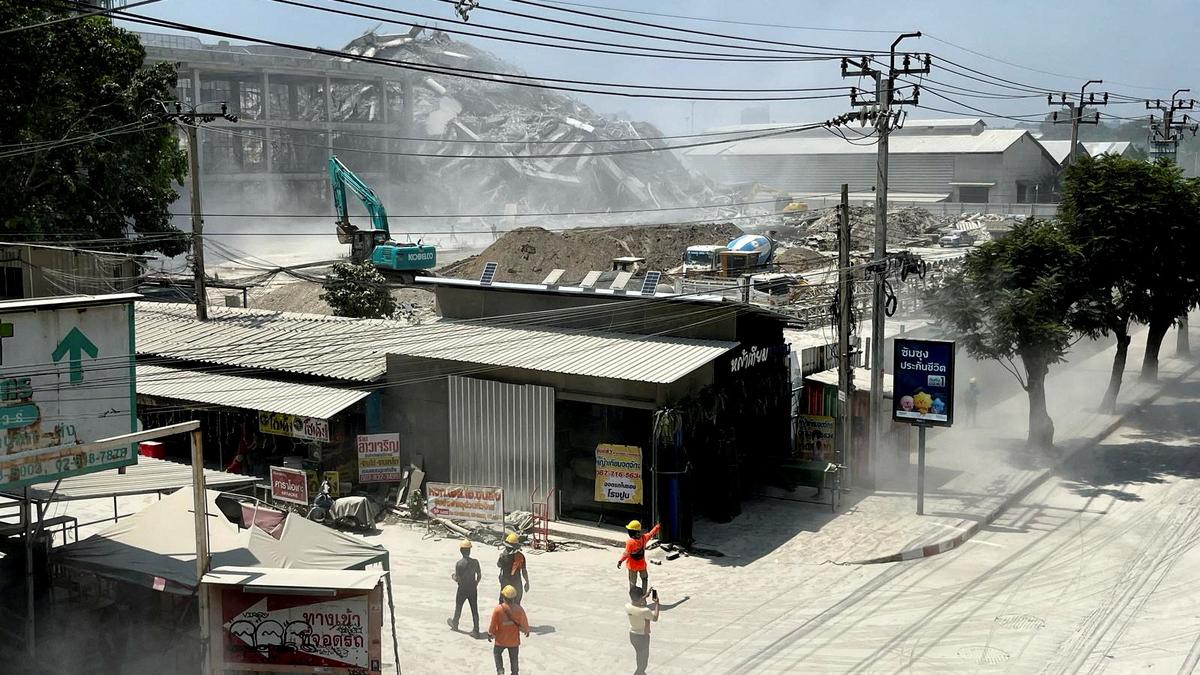
- 02 Apr 2025
In News:
Recently, a 7.7 magnitude earthquake struck Myanmar near the Sagaing-Mandalay border, causing severe damage in key cities such as Mandalay and Sagaing. The Indian Space Research Organisation (ISRO) used its advanced Earth observation satellite CARTOSAT-3 to assess the destruction via high-resolution post-disaster imagery.
CARTOSAT-3: An Overview
- Developer: ISRO
- Launched by: PSLV-C47
- Mission Type: Third-generation agile Earth observation satellite
- Successor to: IRS (Indian Remote Sensing) series
Key Specifications:
Feature Details
Resolution Panchromatic: 0.25 metres (sharpest civilian)
Orbit Altitude 509 km (Sun-synchronous orbit)
Inclination 97.5°
Weight 1,625 kg
Technologies Agile cameras, advanced onboard computers, high-speed data transmission
Commercial Use
- First commercial order executed by NewSpace India Ltd (NSIL), ISRO’s commercial arm.
Applications of CARTOSAT-3
- Disaster Management: Monitoring and assessing damage from earthquakes, floods, and landslides
- National Security & Strategic Operations: Surveillance and intelligence (used in 2016 LoC surgical strikes and 2015 Myanmar-Manipur ops)
- Urban & Rural Planning: Infrastructure development, land-use mapping, and road networks
- Environmental Monitoring: Coastal regulation and land-use changes
- Cartography and Remote Sensing: High-precision geospatial mapping and terrain analysis
Cartosat and Other ISRO Satellite Series
Satellite Series Focus Area
Cartosat-1 to 3 High-resolution Earth imaging for urban/rural planning
RISAT Radar-based imaging (all-weather surveillance)
Oceansat Oceanography, weather, and marine research
INSAT &Megha-Tropiques Atmospheric and climate monitoring
NITI NCAER States Economic Forum Portal
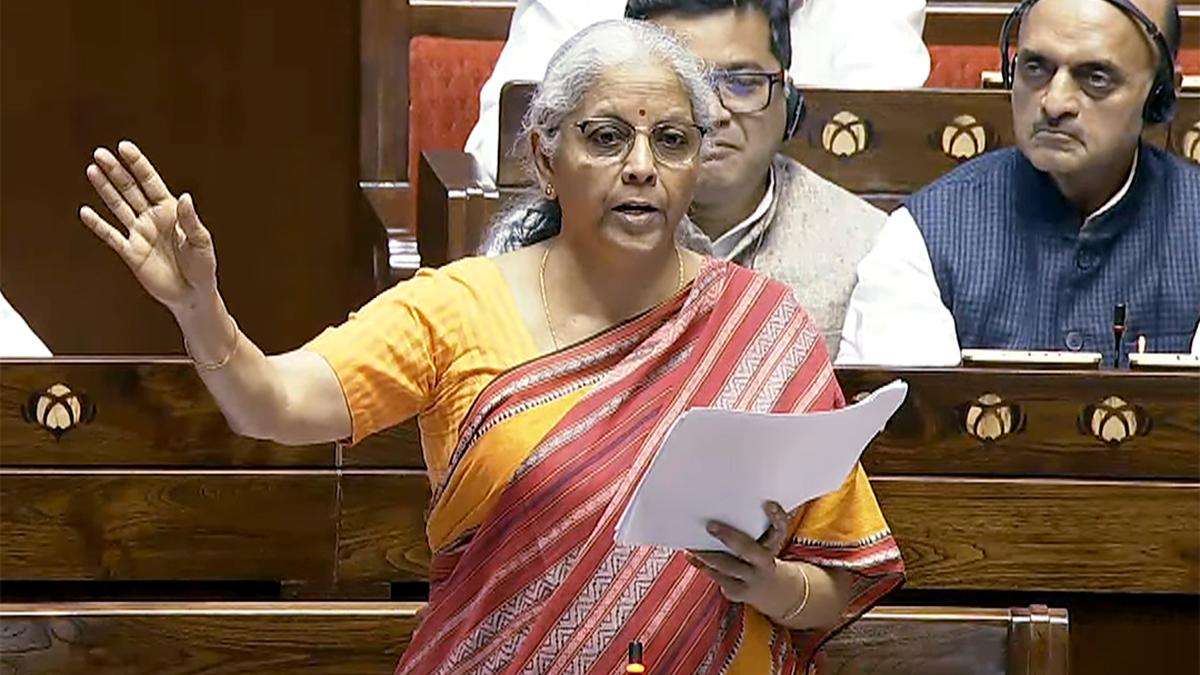
- 02 Apr 2025
In News:
The NITI NCAER States Economic Forum portal, jointly developed by NITI Aayog and the National Council of Applied Economic Research (NCAER), was launched on April 1, 2025, by the Union Finance Minister.
Key Highlights:
The portal serves as a comprehensive digital repository offering over 30 years (1990-91 to 2022-23) of state-wise data on social, economic, and fiscal parameters, promoting evidence-based policymaking and fiscal transparency.
Purpose and Significance
- Objective: To enable policymakers, researchers, and academics to access, compare, and analyze long-term trends in State finances and socio-economic indicators.
- Promotes data-driven governance, facilitates inter-State comparisons, and strengthens cooperative federalism.
- Addresses persistent demands for transparent, centralized, and accessible fiscal data, especially amid concerns of fiscal imbalance between Centre and States.
Core Features of the Portal
The portal is structured around four main components:
- State Reports:
- Covers all 28 Indian States.
- Summarizes macroeconomic and fiscal landscapes based on key indicators—demography, economic structure, social indicators, and fiscal metrics.
- Data Repository:
- Offers access to extensive datasets organized into five verticals:
- Demography
- Economic Structure
- Fiscal
- Health
- Education
- Offers access to extensive datasets organized into five verticals:
- Fiscal and Economic Dashboard:
- Interactive dashboards with graphical representations of vital statistics.
- Enables visualization of trends and download of datasets.
- Research and Commentary:Features expert analyses, research papers, and commentary on fiscal policies and State-level financial management.
Benefits and Policy Implications
- Enhances transparency and informed public debate.
- Supports benchmarking of States' performance against national averages and peer States.
- Aids in planning reforms, improving public finance management, and addressing regional disparities.
- A vital tool for academicians, policy analysts, and government officials working on State-level governance and development planning.
Arctic Geopolitics

- 02 Apr 2025
In News:
The Arctic region, traditionally isolated due to its extreme climate and thick ice cover, is rapidly emerging as a global geopolitical hotspot. Accelerated melting of ice caps due to climate change has unlocked access to untapped resources and new shipping routes, intensifying competition among major powers.
Resource Wealth and Strategic Significance
- The Arctic holds an estimated 13% of the world’s undiscovered oil and 30% of untapped natural gas (USGS, 2009).
- Rich in rare earth elements, phosphates, and copper, particularly in areas like Greenland.
- Melting ice is opening access to valuable fishing grounds and enabling commercial navigation.
Emerging Shipping Routes
- Northeast Passage (Northern Sea Route): Along Russia’s Arctic coast, connecting Europe and Asia. Reduces distance by ~8,000 km compared to the Suez Canal.
- Northwest Passage: Through Canada’s Arctic Archipelago. Disputed between Canada (claims internal waters) and the U.S. (asserts international strait).
These routes offer significant economic and strategic advantages, including reduced dependency on traditional chokepoints like the Suez Canal.
Governance: The Arctic Council
The Arctic Council, established by the 1996 Ottawa Declaration, is the key intergovernmental forum for Arctic affairs.
Members (8 Arctic States):
- Canada, Denmark (via Greenland), Finland, Iceland, Norway, Russia, Sweden, and the United States
These countries:
- Control Arctic land territories
- Have sovereign rights over resources within their Exclusive Economic Zones (EEZs)
Permanent Participants:
- Six Indigenous groups representing Arctic communities.
Observers:
- Includes India, China, Japan, UK, among others.
- 13 countries, 13 intergovernmental, and 12 non-governmental organisations.
- All decisions require consensus of member states and consultation with Indigenous groups.
Legal Framework and Territorial Claims
- Governed primarily by UNCLOS (United Nations Convention on the Law of the Sea).
- Allows Arctic states to extend claims beyond their 200-nautical-mile EEZ if they prove natural extension of the continental shelf.
- Russia, Canada, and Denmark have submitted overlapping claims to the Arctic seabed.
Unlike Antarctica, which is demilitarised under international treaties, the Arctic has no such binding legal framework, allowing military infrastructure and territorial claims.
Geopolitical Tensions in the Arctic
Russia’s Military Build-up:
- Largest fleet of Arctic icebreakers, including nuclear-powered vessels.
- Maintains Soviet-era Arctic military bases.
- Planted a flag on the Arctic seabed at the North Pole in 2007.
- In 2022, conducted naval exercises with China, signaling deepening strategic ties.
U.S. Interests:
- Renewed interest in Greenland, citing national security.
- Operates the Pituffik Air Base in Greenland.
- Dispute with Canada over Northwest Passage navigation rights.
NATO’s Arctic Response:
- All Arctic Council members except Russia are NATO allies.
- NATO has increased its Arctic presence post-Ukraine conflict.
- Strategic focus on GIUK (Greenland-Iceland-UK) Gap, a critical naval chokepoint for Russian submarines.
China’s Arctic Aspirations:
- Declared itself a "Near-Arctic State" in 2018.
- Investing in Arctic research and building its first nuclear-powered icebreaker.
- Interested in Russia’s Northeast Passage for trade under the proposed “Polar Silk Road”.
India and the Arctic
India, an observer in the Arctic Council, is closely monitoring developments. It has an Arctic Policy focusing on:
- Scientific research
- Climate and environmental protection
- International cooperation
Understanding "Vibe Coding"
- 02 Apr 2025
In News:
The concept of “vibe coding” gained traction after an OpenAI co-founder demonstrated how modern AI tools can translate intuitive prompts into working code—eliminating the need for in-depth technical expertise.
What is Vibe Coding?
Vibe coding is an intuition-driven, casual approach to programming where users describe what they want to build, and AI generates the code accordingly. Instead of relying on traditional programming logic, this method focuses on the user’s "feel" or intent—making it well-suited for low-stakes, creative, or personal projects.
How It Works:
- Users give natural language prompts describing their desired output (e.g., a simple game, utility, or web page).
- AI models like ChatGPT, Cursor, or Sonnet generate the corresponding code.
- The user then runs or copies the code without necessarily understanding its structure or logic.
Key Features of Vibe Coding:
- Prompt-first, logic-second: Relies on describing functionality rather than coding step-by-step.
- Low technical barrier: No deep knowledge of syntax, algorithms, or frameworks required.
- Trial-and-error approach: Users often accept AI-generated suggestions without critical review.
- Heavy dependence on AI: Debugging and improvements rely primarily on AI assistance.
- Limited focus on performance/security: Generated code may lack optimization or safeguards.
Why Vibe Coding Matters:
- Democratizes coding: Makes programming accessible to those without formal training.
- Fuels creativity: Encourages playful experimentation and rapid prototyping.
- Saves time for developers: Ideal for automating small, repetitive tasks.
- Inspires new learners: Attracts non-traditional audiences into tech through approachable tools.
- Useful for quick builds: Ideal for weekend hacks, personal utilities, or mock-ups.
Alzheimer’s Disease
- 02 Apr 2025
In News:
A new drug, Gantenerumab, has shown potential in slowing the progression of early-onset Alzheimer’s by significantly reducing the accumulation of amyloid plaques, a major indicator of the disease.
Alzheimer’s Disease Overview
- Alzheimer’s disease is a progressive neurodegenerative disorder, primarily impairing memory, thinking, and reasoning.
- It is the most common cause of dementia, accounting for 60–80% of all dementia cases globally.
- The disease is marked by the accumulation of amyloid beta plaques, which interfere with neuronal communication and trigger brain inflammation, eventually leading to cell death.
What is Early-Onset Alzheimer’s Disease (EOAD)?
- EOAD affects individuals below 65 years of age, comprising 5–10% of total Alzheimer’s cases.
- It progresses more rapidly and often strikes during a person’s prime working years.
- EOAD is strongly linked to genetic mutations in three genes: APP, PSEN1, and PSEN2, which result in overproduction of amyloid beta proteins.
Amyloid Plaques: The Disease Hallmark
- Amyloid plaques are clusters of misfolded amyloid beta proteins.
- These plaques disrupt brain function, contribute to inflammation, and kill neurons.
- They are central to the amyloid hypothesis, which posits that amyloid accumulation is a primary cause of Alzheimer’s progression.
Gantenerumab: A Potential Breakthrough
- Gantenerumab is a monoclonal antibody developed to target and eliminate amyloid beta plaques in the brain.
- It can cross the blood-brain barrier, a key obstacle in neurological drug delivery.
- The drug binds to amyloid plaques, signaling microglial cells (brain's immune cells) to break down and clear these plaques.
- This action may slow cognitive decline in early stages of the disease.
Recent Clinical Trial Findings
- A randomized, placebo-controlled trial involved 73 participants with rare inherited EOAD mutations.
- A subgroup of 22 asymptomatic participants showed reduced risk of symptom development from nearly 100% to 50% over eight years.
- Brain imaging confirmed a significant reduction in amyloid buildup.
Limitations and Risks
- Amyloid-related imaging abnormalities (ARIA) were observed in 53% of trial participants:
- Brain swelling in 30%
- Microbleeds in 27%
- Iron deposits in 6%
- No major hemorrhages or deaths occurred, but side effects necessitate regular monitoring.
- The cognitive benefits were modest, and the drug is costly to produce, raising affordability concerns.
- The study had a small sample size and focused only on a rare genetic subset of EOAD.
Significance and Future Prospects
- Gantenerumab supports the amyloid hypothesis, alongside other drugs like lecanemab and donanemab.
- Despite its discontinuation in 2022 due to limited efficacy, new findings may revive interest in its development.
- The trial highlights the critical importance of early diagnosis and biomarker testing for timely therapeutic intervention.
Strength of Cloud Bands and their role in Indian Monsoon
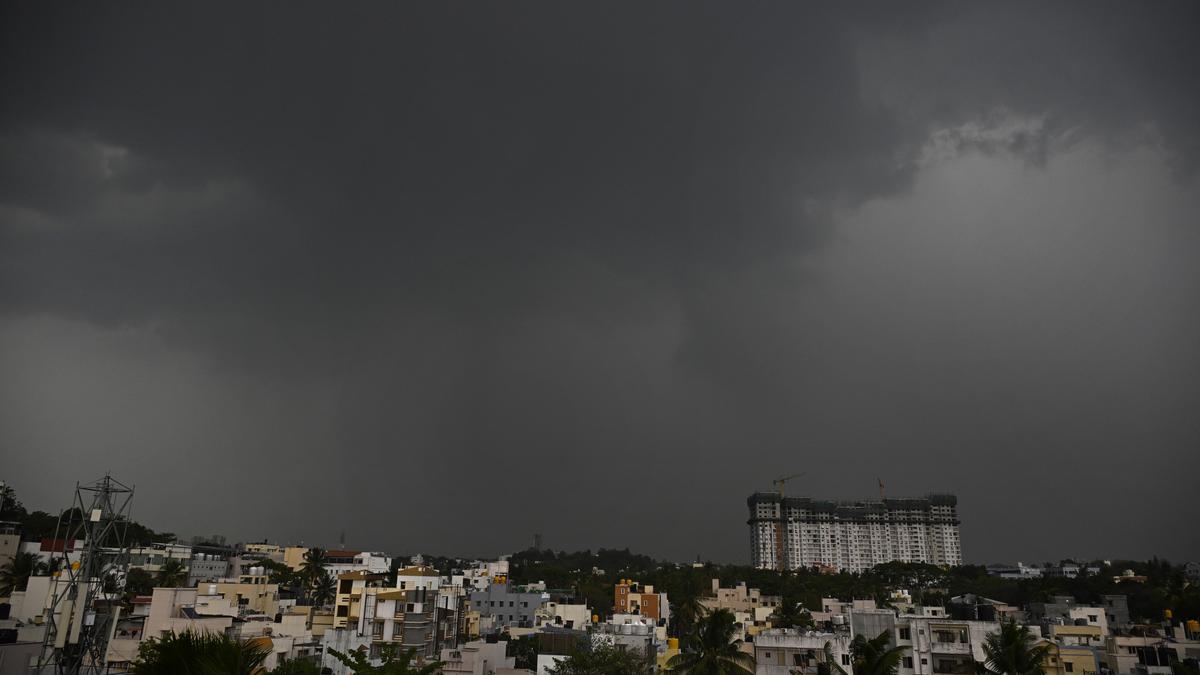
- 01 Apr 2025
In News:
A recent study by the Indian Institute of Science (IISc) has shed new light on the role of equatorial cloud bands in determining the movement and intensity of monsoon rainfall over India. These insights could enhance the accuracy of seasonal and sub-seasonal climate models.
Key Findings of the Study:
- Importance of Cloud Band Strength:
- The northward movement of monsoon cloud bands—crucial for triggering wet spells in India—is not guaranteed. Only strong cloud bands originating near the equator successfully propagate northward.
- Weak cloud bands fail to initiate wet spells, countering earlier assumptions that all cloud bands move north regardless of strength.
- Role of BSISO:
- The Boreal Summer Intraseasonal Oscillation (BSISO) governs alternating wet and dry spells during the monsoon. It helps transport convection (cloud activity and heat) from the Indian Ocean towards the Indian subcontinent.
- The size and strength of the cloud band influenced by BSISO determine the duration and intensity of wet phases.
- Air-Sea Interaction:
- Moisture buildup and wind strength, both vital for rain formation, are heavily influenced by air-sea interaction in the equatorial Indian Ocean.
- Strong coupling between the ocean and atmosphere enhances atmospheric moisture, aiding cloud formation and monsoon intensity.
- Impact of Climate Change:
- With rising global temperatures, background atmospheric moisture is expected to increase.
- This is projected to lead to a 42%–63% rise in rainfall during wet spells across India and surrounding seas in the future.
- Modeling and Forecasting:
- The study's findings help address gaps in current climate models, improving forecasts for monsoon rains at both seasonal and sub-seasonal scales.
What is BSISO?
- A large-scale monsoon phenomenon active between June and September.
- Alternates between active (rainy) and break (dry) spells.
- Modulated by global oceanic phenomena such as:
- El Niño: Weakens northward propagation of BSISO.
- La Niña: Enhances BSISO movement towards India.
Key Facts About Indian Monsoon:
- Monsoon Etymology: Derived from Arabic "mausim", meaning season.
Types of Monsoons in India:
- Southwest Monsoon (June–September):
- Also called the advancing monsoon.
- Brings 80% of India's annual rainfall.
- Driven by low pressure over the Indian subcontinent and high pressure over the Indian Ocean.
- Northeast Monsoon (October–December):
- Known as the retreating monsoon.
- Affects southeastern coastal regions, especially Tamil Nadu and Andhra Pradesh.
Key Influencing Factors:
- Inter-Tropical Convergence Zone (ITCZ): Moves northward in summer, attracting moisture-laden winds.
- Tibetan Plateau Heating: Generates the Tropical Easterly Jet, enhancing monsoon inflow.
- Somali Jet: Strengthens monsoon winds from the Arabian Sea.
- Indian Ocean Dipole (IOD):
- Positive IOD (warmer west): Enhances monsoon.
- Negative IOD (warmer east): Weakens it.
- ENSO (El Niño–Southern Oscillation):
- El Niño: Linked with weaker monsoons and droughts.
- La Niña: Associated with stronger and prolonged monsoon spells.
Maasai Tribe and the Carbon Credit Conflict in Tanzania
- 01 Apr 2025
In News:
The Maasai, a prominent indigenous community in East Africa, are resisting international carbon credit projects in Tanzania. They fear these initiatives may lead to land dispossession and the erosion of their traditional pastoralist lifestyle.
Who are the Maasai?
- Ethnic Group: Semi-nomadic pastoralists found primarily in Tanzania and Kenya, especially in the Great Rift Valley and semi-arid savannas.
- Language:Maa (Eastern Sudanic branch, Nilo-Saharan family).
- Cultural Identity:
- Known for distinct attire, beadwork, and warrior traditions.
- Socially organized through patrilineal clans, divided into moieties and age-sets (from junior warriors to senior elders).
- Youth (Morans) undergo bush training for resilience and discipline.
- Livelihood:
- Rely on cattle, sheep, and goats for milk, meat, and blood.
- Practice transhumance, moving seasonally for water and pasture.
- Reside in kraals—circular enclosures with mud-dung houses and thorn fences.
Carbon Credit Projects and Rising Tensions
- Projects Involved:
- Longido and Monduli Rangelands Carbon Project (Volkswagen ClimatePartners).
- Resilient Tarangire Ecosystem Project (The Nature Conservancy).
- Area Affected: Nearly 2 million hectares of Maasai grazing land.
- Project Goal: Store soil carbon and sell offsets to polluters globally.
Maasai Concerns and Resistance
- Forced Land-Use Changes:Carbon projects impose structured rotational grazing (e.g., 14-day grazing cycles), disrupting centuries-old mobility practices.
- Lack of Consultation:Research by the Maasai International Solidarity Alliance (MISA) shows widespread violations of Free, Prior, and Informed Consent (FPIC).
- Women and youth were excluded from consultations.
- Some communities unknowingly entered 30–40 year contracts.
- Payments were often tokenistic and poorly explained.
- Economic and Legal Risks:
- Villages lack clarity on revenue shares from credits.
- Contracts lock communities into rigid systems despite village land-use plans being reviewed every 10 years.
- Intermediaries—not end buyers—dominate the agreements.
Government and Global Dimensions
- Tanzania’s Push:The government expects $1 billion/year from carbon credit sales and is streamlining the sector through the National Carbon Monitoring Centre (NCMC).
- Global Scrutiny:
- Investigations reveal over 90% of rainforest offsets by some certifiers are ineffective.
- Soil carbon in semi-arid areas (like Maasai rangelands) is volatile and hard to quantify.
Grassroots Resistance and Legal Action
- Cultural and Spiritual Attachment:Land is integral to Maasai identity, beyond livestock rearing—it holds spiritual and cultural significance.
- Legal Mobilization:Young warriors, once defending livestock from predators, now advocate legally to protect ancestral land.MISA, formed after violent evictions in 2022 (Ngorongoro, Loliondo), spearheads resistance against exploitative schemes.
India–Myanmar Free Movement Regime (FMR)
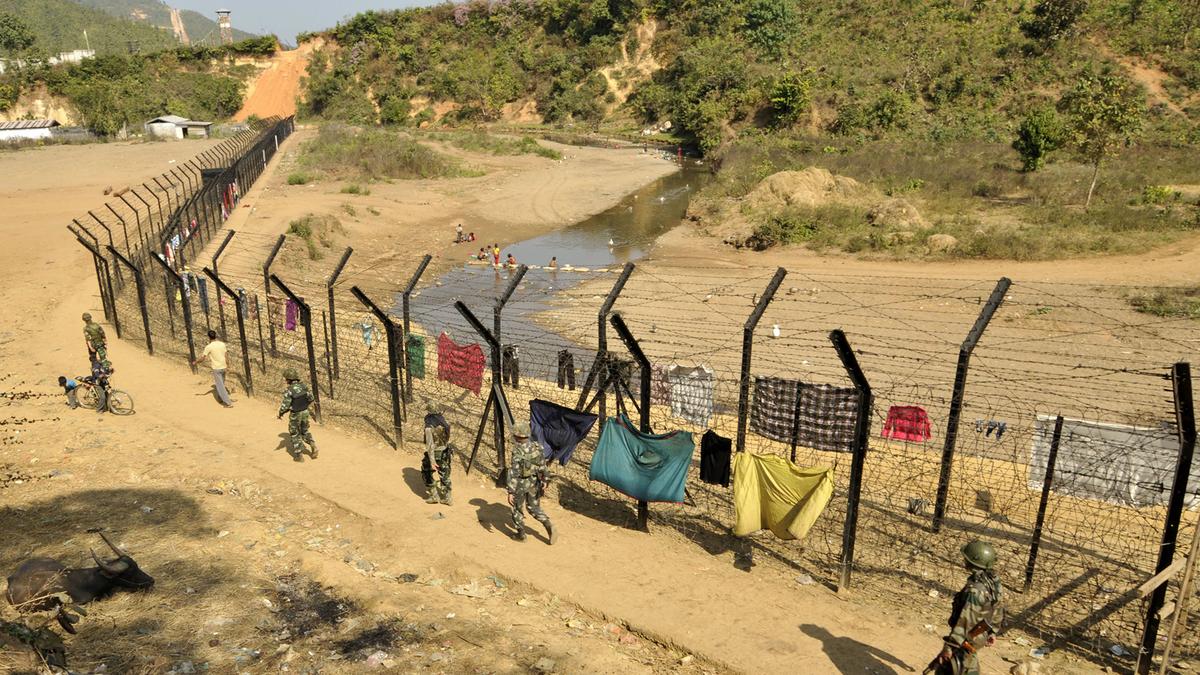
- 01 Apr 2025
In News:
In February 2024, Union Home Minister Amit Shah announced the scrapping of the Free Movement Regime (FMR) along the India–Myanmar border, citing national security concerns. The decision is reportedly influenced by the former Manipur Chief Minister, who blamed unregulated cross-border movement for ethnic violence in Manipur. However, the decision has not yet been implemented, and no formal notification or bilateral agreement has been issued. Mizoram and Nagaland have opposed the move, highlighting socio-cultural concerns.
What is the Free Movement Regime (FMR)?
- Introduced: 1968
- Current Limit: Movement up to 16 km on either side of the 1,643 km-long India–Myanmar border
- Eligibility: Members of hill tribes on both sides with a border pass valid for one year, allowing stay for up to 2 weeks per visit
- Purpose:
- Preserve historical, cultural, and familial ties between border communities
- Facilitate local trade and people-to-people exchanges
- Complement India’s Act East Policy by promoting cross-border cooperation
- Regulations: Initially 40 km (1968), reduced to 16 km (2004), with tighter checks from 2016
- Formal Implementation: 2018
Impact on Border Communities:
- Deep Ethnic and Familial Ties: Many communities across Mizoram, Manipur, Nagaland, and Arunachal Pradesh share ancestry and cultural links with communities in Myanmar, such as the Chin and Mizo peoples.
- Local Trade & Livelihoods: FMR supports livelihoods through informal trade. Its removal could disrupt economic dependence in these remote areas.
- Perceived as Redundant: Locals report that cross-border interaction predates FMR and continues with or without official sanction.
Security Concerns and Contraband Issues:
- Despite increased military presence post the Border Area Development Programme (BADP) in the 1980s, smuggling of contraband such as drugs, gold, and areca nuts continues unabated.
- Centre’s View: FMR allegedly facilitates illegal migration, drug trafficking, and infiltration contributing to internal instability.
- Local View: Scrapping the FMR alone won’t stop cross-border crime without comprehensive border management and community engagement.
Challenges with Border Fencing:
- Difficult Terrain: The mountainous and forested landscape makes border fencing logistically and financially challenging.
- Social Sensitivity: Fencing may provoke protests as the border cuts across ethnically unified communities.
- Unified Homeland Demand: Risk of reviving separatist sentiments, especially in regions like Eastern Nagaland, where demands for Frontier Nagaland exist.
Legal and Strategic Concerns:
- The Forest (Conservation) Amendment Act, 2023 allows the use of forest land within 100 km of international borders for strategic projects, raising concerns about displacement and loss of ancestral lands.
Way Forward:
- Balanced Approach Needed:
- Any changes must consider security needs as well as local sensitivities.
- Community engagement and consultation are crucial to avoid unrest.
- Alternatives to Fencing:
- Strengthen customs and intelligence units along the border.
- Promote legal trade channels to formalize economic activities.
- Enhance monitoring mechanisms without disrupting historical ties.
- Long-Term Strategy:
- Address instability in Myanmar, Chinese influence, and Golden Triangle drug trade through coordinated regional efforts.
- Align border governance with India’s Act East Policy, focusing on connectivity and cultural diplomacy.
Mount Kenya’s Rapid Glacier Retreat due to Climate Change
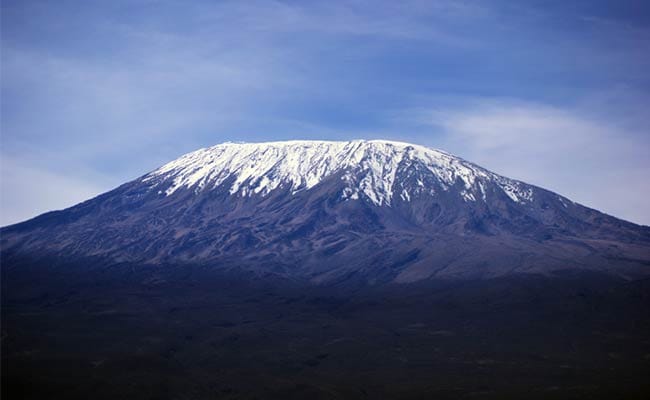
- 01 Apr 2025
In News:
Mount Kenya, Africa’s second-highest peak after Kilimanjaro, is witnessing a dramatic loss of its glacial cover due to accelerating climate change. Scientists warn that the mountain may become completely ice-free by 2030.
Key Findings:
- The Lewis Glacier, once one of the most prominent ice bodies on Mount Kenya, has experienced substantial shrinkage.
- A 2011 study by the University of Innsbruck (Austria) reported a 90% volume loss in Lewis Glacier between 1934 and 2010.
- A 2023 satellite analysis revealed that only 4.2% of the ice present in 1900 remains today.
About Mount Kenya:
- Location: Central Kenya, just south of the Equator.
- Elevation:5,199 meters (17,058 feet) at its highest peak, Batian.
- Geological Nature: An extinct stratovolcano, heavily eroded over millennia.
- Glaciers: Includes Lewis Glacier and Tyndall Glacier, among the last surviving tropical glaciers in Africa.
- UNESCO Status: Declared a World Heritage Site in 1997 for its ecological and cultural value.
Exercise PrachandPrahar (2025)
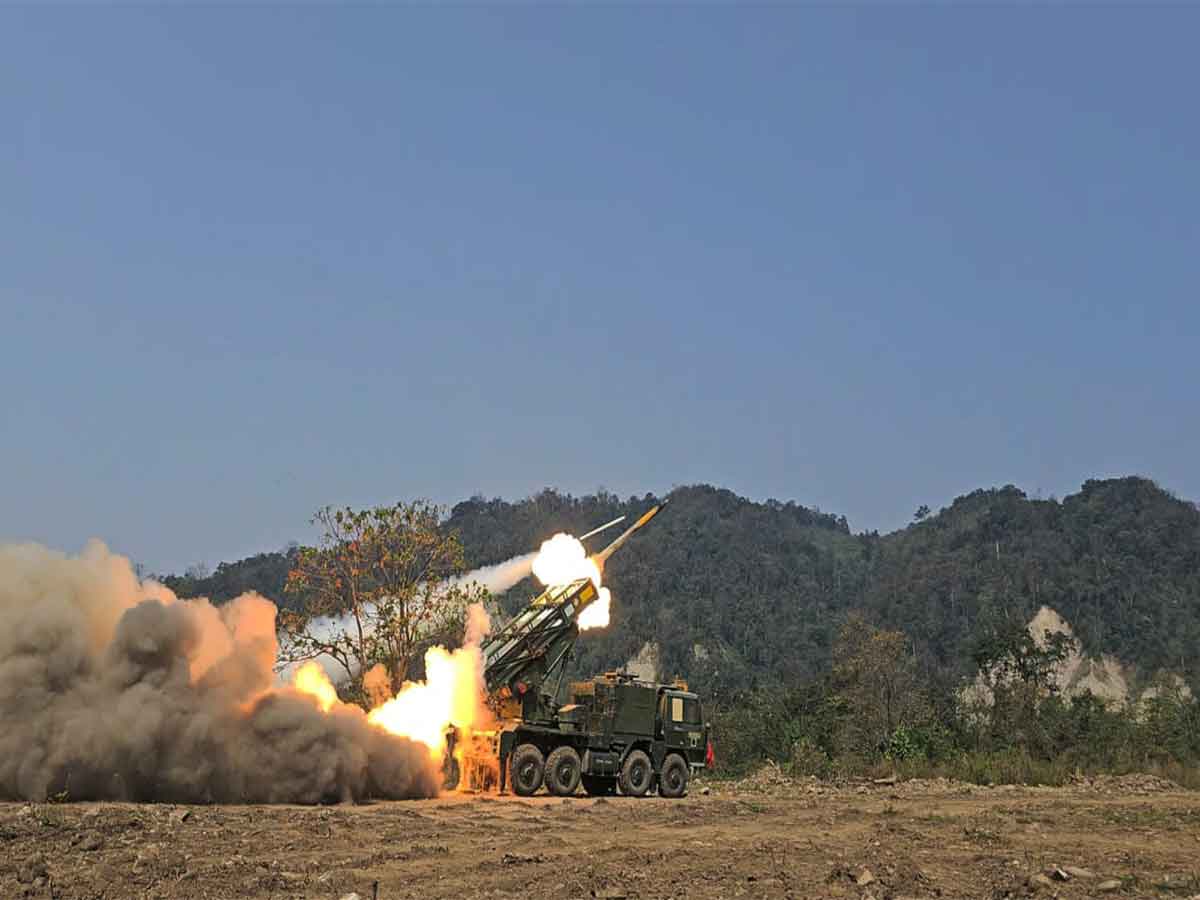
- 01 Apr 2025
In News:
Exercise PrachandPrahar was a tri-service integrated multi-domain military exercise conducted by the Indian Armed Forces in the high-altitude terrain of Arunachal Pradesh, along the Northern Borders, specifically under the Eastern Army Command.
Timeline:
- Held: March 25–27, 2025
- Preceded by:Exercise PoorviPrahar (November 2024), which focused on integrated aviation asset application.
Objective:
To validate integrated operational capabilities of the Army, Navy, and Air Force, and enhance India's preparedness for future warfare scenarios along the 3,488-km long Line of Actual Control (LAC) with China.
Key Highlights:
- Location: High-altitude Himalayan terrain, eastern sector of the LAC in Arunachal Pradesh.
- Forces Involved:
- Indian Army (including Special Forces)
- Indian Air Force (IAF)
- Indian Navy
Major Components:
- Surveillance and Domain Awareness:
- Long-range surveillance aircraft (IAF)
- Maritime domain awareness aircraft (Navy)
- Helicopters and UAVs
- Space-based assets
- Precision Strike Capabilities:
- Fighter aircrafts
- Long-range rocket systems
- Medium artillery
- Armed helicopters
- Swarm drones
- Loitering munitions
- Kamikaze drones
- Operational Environment:
- Simulated electronic warfare and contested conditions.
- Focus on jointness, precision, and rapid response.
Strategic Importance:
- Demonstrated seamless command, control, and coordination among the three services.
- Validated the ability to conduct multi-domain operations (MDO) in challenging terrain.
- Reinforced India’s technological edge and combat readiness along strategic frontiers.
UK–Mauritius Deal on Chagos Islands
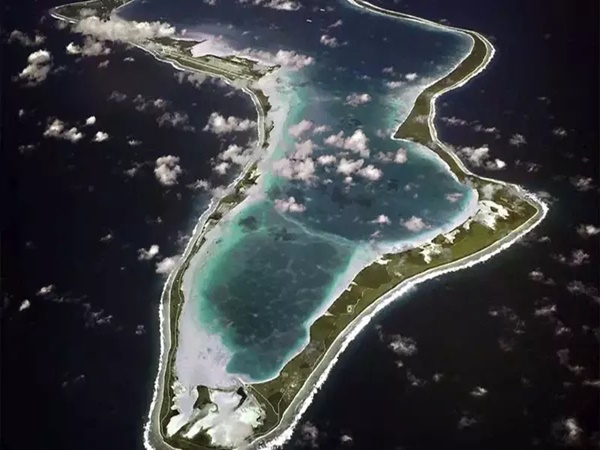
- 25 May 2025
Background:
The Chagos Archipelago, a remote group of over 60 islands in the Indian Ocean, has been at the center of a decades-long sovereignty dispute between the United Kingdom and Mauritius. The UK separated the islands from Mauritius in 1965, three years before Mauritius gained independence, and established the British Indian Ocean Territory (BIOT).
In the 1970s, the UK allowed the United States to build a military base on Diego Garcia, the largest island in the archipelago. The local Chagossian population was displaced, leading to international criticism and legal challenges.
Recent Development
In May 2025, the UK government, led by Prime Minister Keir Starmer, agreed to transfer sovereignty of the Chagos Islands to Mauritius. The agreement follows the 2019 advisory opinion of the International Court of Justice (ICJ) and United Nations resolutions urging the UK to end its colonial administration of the islands.
Key Provisions of the Treaty
- Sovereignty Transfer: Mauritius regains control over the Chagos Archipelago, including Diego Garcia.
- Lease Agreement: The UK will lease back Diego Garcia from Mauritius for 99 years, paying approximately:
- £101–136 million annually, totaling over £3 billion ($4 billion) across the lease term.
- Strategic Base Retained: The US-UK military base on Diego Garcia will continue operating. It is vital for counter-terrorism, surveillance, and regional stability in South Asia, the Middle East, and East Africa.
Geographical Significance
- The Chagos Islands lie about 500 km south of the Maldives and are part of the Chagos–Laccadive Ridge.
- It is the southernmost archipelago of the ridge and is located over 9,000 km southeast of the UK.
- Major islands: Salomon Islands, PerosBanhos, Diego Garcia.
Strategic and Military Importance
- Diego Garcia serves as a key US military outpost, supporting operations in multiple global regions.
- Described as an “almost indispensable platform”, the base has hosted long-range bombers and surveillance missions.
- Recently, it has been used for nuclear-capable bomber deployments and airstrike missions.
Local and International Reactions
- Mauritius: The agreement is celebrated as the completion of its decolonisation process. Chagossian exiles expressed joy over the chance to return to their ancestral lands.
- India: Strongly supported the sovereignty restoration, aligning with its principles on decolonisation, sovereignty, and territorial integrity. India views the resolution as a positive development for Indian Ocean regional stability.
Criticism and Concerns
- Some UK opposition leaders raised concerns about national security and financial burden on taxpayers.
- There are apprehensions about Mauritius’s close trade ties with China, though the deal includes safeguards against “malign influence.”
Payments Regulatory Board (PRB)
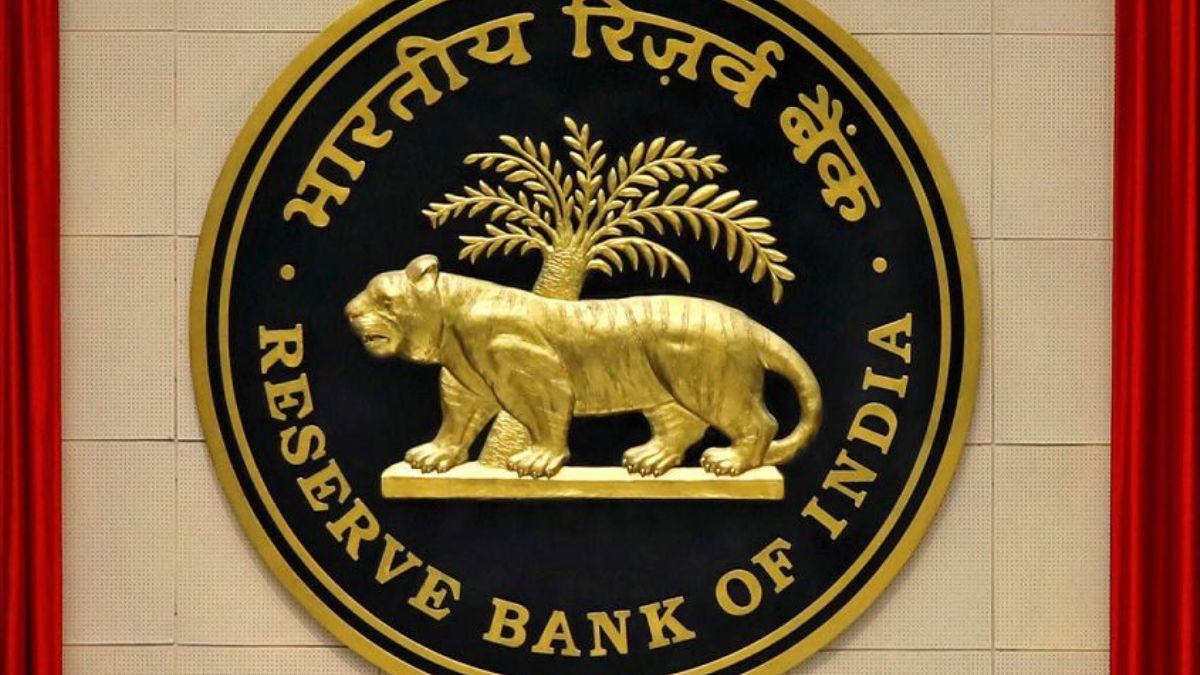
- 25 May 2025
In News:
The Central Government has notified the Payments Regulatory Board Regulations, 2025, replacing the earlier Board for Regulation and Supervision of Payment and Settlement Systems (BPSS) with a new statutory authority — the Payments Regulatory Board (PRB).
About the PRB
- Legal Basis: Constituted under Section 3 of the Payment and Settlement Systems Act, 2007.
- Objective: To regulate and supervise payment systems in India with broader representation and holistic oversight.
Composition (Total: 6 Members)
- Chairperson: Governor of the Reserve Bank of India (RBI)
- Ex-Officio Members:
- Deputy Governor of RBI in charge of the Department of Payment and Settlement Systems (DPSS)
- One RBI official nominated by the RBI Central Board
- Government Nominees:Three members nominated by the Central Government (previous BPSS had none)
Other Key Features:
- Expert Consultation: PRB can invite experts from fields like law and IT as permanent or ad hoc members.
- Eligibility Criteria:
- Members must be below 70 years of age
- Should not hold any legislative office or have material conflicts of interest
- Governance:
- Board meets at least twice a year
- Decisions are by majority vote; in case of a tie, the Chairperson (or Deputy Governor) casts the deciding vote.
- Delegation: PRB can delegate functions to RBI officers or sub-committees.
Institutional Support
- The PRB will be supported by the RBI’s DPSS, which will report directly to the board.
Significance of the Reform
- Marks a structural reform in the regulation of India’s rapidly growing payments ecosystem.
- Enhances government oversight through its nominees.
- Aims to improve coordination among various departments (e.g., fintech, digital payments).
- Seeks to provide uniform and consolidated regulation across diverse payment systems.
Acharya Charaka and Sage Sushruta
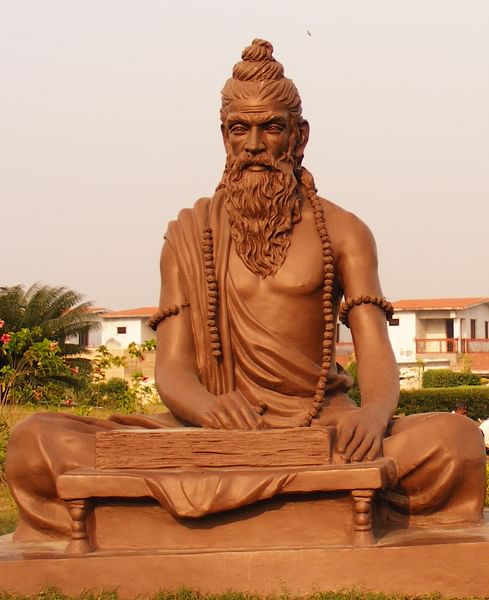
- 25 May 2025
In News:
The Vice-President of India recently inaugurated the statues of Acharya Charaka and Sage Sushruta at Raj Bhavan, Goa, to honour India's ancient medical heritage rooted in Ayurveda and surgery.
Acharya Charaka – Father of Indian Medicine
- Period: Circa 100 BCE – 200 CE
- Region: Associated with Taxila, under the Kushan emperor Kanishka.
- Key Contribution:
- Originally based on the Agnivesha Samhita, later revised and compiled by Charaka.
- Focused on internal medicine (Kayachikitsa).
- Discussed physiology, disease pathology, diagnosis, and therapeutic techniques.
- Introduced the concept of three doshas: Vata, Pitta, Kapha—the basis for diagnosis and treatment in Ayurveda.
- Provided early insights into embryology (Garbha Vigyan) and preventive healthcare.
- Stressed medical ethics, such as confidentiality, non-maleficence, and the moral duties of a physician.
- Emphasized the importance of diet, lifestyle, and environmental factors in health.
- The Charaka Samhita is part of the B?hatTrayi (Great Trilogy) of Ayurveda and was expanded by D??habala.
- Translated into Arabic, Latin, and other languages, reflecting its global medical influence.
Sage Sushruta – Father of Surgery
- Period: Circa 600–700 BCE
- Region:Practised in Kashi (Varanasi), likely under King Divodasa.
- Key Contribution:
- A pioneering treatise in surgery and medical science.
- Detailed 300+ surgical procedures and over 100 surgical instruments.
- Innovations include rhinoplasty (nasal reconstruction), skin grafts, cataract surgery, and caesarean sections.
- Explained fractures, dislocations, use of anaesthesia, and surgical training.
- Emphasized dissection-based anatomy, practical education, and simulation for surgical learning.
- Covered areas like public health, toxicology, pediatrics (Kaumarbhritya), and neonatal care.
- Integrated scientific observation, hygiene, and evidence-based methods long before modern systems.
Collective Significance:
- Both are part of the B?hatTrayi (Charaka Samhita, Sushruta Samhita, and Ashtanga Hridaya), forming the backbone of Ayurvedic literature.
- Their work laid the foundation for:
- Holistic medicine and ethical healthcare practice.
- Advanced understanding of human physiology and embryology.
- Scientific surgery, centuries ahead of global developments.
- Contributions to child health (Kaumarbhritya) and public hygiene.
- Their texts influenced Arab and European medicine through translations such as Kitab-i-Susrud.
Asian Productivity Organization (APO)
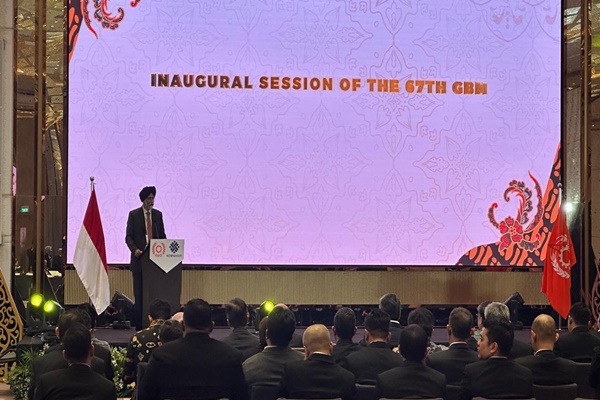
- 25 May 2025
In News:
India has officially taken over the Chairmanship of the Asian Productivity Organization (APO) for the 2025–26 term during the 67th Governing Body Meeting.
About APO:
- Type: Regional intergovernmental organization.
- Established:1961.
- Headquarters:Tokyo, Japan.
- Membership: 21 member economies from the Asia-Pacific region, including India, Japan, Iran, Indonesia, Vietnam, Philippines, South Korea, Singapore, and others.
- India:Founding member of the APO.
Key Objectives:
- Enhance productivity in member countries through mutual cooperation.
- Foster sustainable and inclusive socioeconomic development.
- Promote innovation-led growth across industry, agriculture, services, and public sectors.
Core Functions:
- Policy Advisory:Assists governments in designing national productivity strategies.
- Capacity Building:Conducts training programs, workshops, and research initiatives to boost productivity skills.
- Centres of Excellence:Facilitates innovation and best practices sharing among members.
- Green Productivity:Promotes environmentally sustainable growth models.
- Digital & Innovation Ecosystem:Encourages digital transformation and entrepreneurship through regional collaboration.
Organizational Structure:
- Governing Body:The apex decision-making entity; sets strategic direction and reviews performance annually.
- National Productivity Organizations (NPOs):Act as nodal agencies coordinating with the APO at the national level.
- Secretariat:Based in Tokyo, headed by a Secretary-General, manages daily operations.
Significance for India:
- India’s chairmanship marks a step forward in shaping regional productivity policies and highlights India’s commitment to sustainable development and economic cooperation in the Asia-Pacific.
State of the World’s Animal Health Report 2025
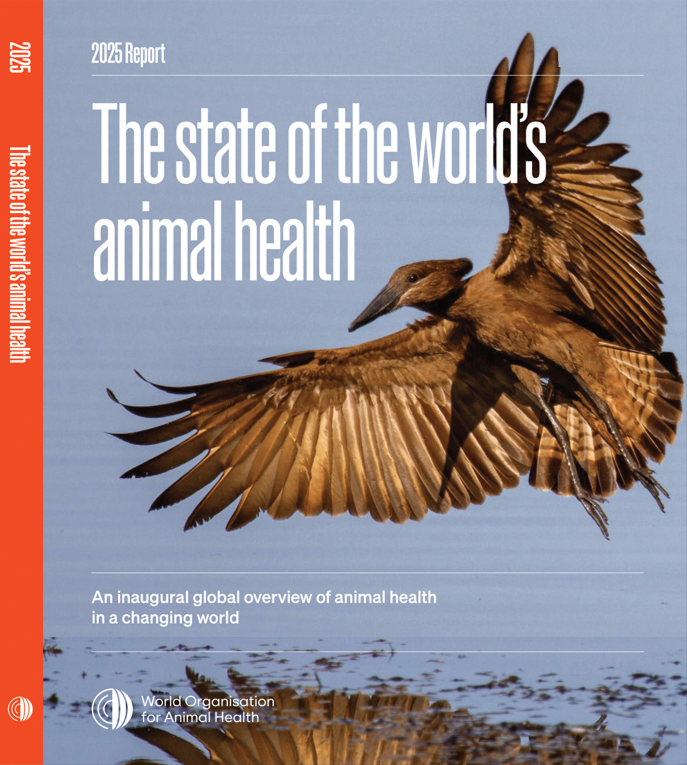
- 25 May 2025
In News:
Infectious animal diseases are spreading to previously unaffected regions and species, with nearly half (47 per cent) capable of zoonotic transmission or spreading between animals, according to the inaugural State of the World’s Animal Health report released by the World Organisation for Animal Health (WOAH).
Key Details:
Published by:
- World Organisation for Animal Health (WOAH), formerly OIE (Office International des Epizooties), founded in 1924, headquartered in Paris.
- Recognized by the WTO for setting global standards on animal health and zoonotic disease control.
Objective of the Report:
- To provide a comprehensive global assessment of animal health trends, risks, and disease outbreaks.
- To promote a One Health approach, linking animal health with human health and environmental sustainability.
Major Findings:
1. Rising Zoonotic Threats:
- 47% of animal diseases reported between 2005–2023 have zoonotic potential (can spread from animals to humans).
- These include avian influenza, African swine fever (ASF), foot-and-mouth disease (FMD), and Peste des Petits Ruminants (PPR).
2. Geographic Expansion of Diseases:
- Diseases are emerging in new regions and species due to climate change, global trade, and ecosystem disruptions.
- Example: ASF jumped over 1,800 km to reach Sri Lanka in 2024, marking the year's most significant disease leap.
- PPR re-emerged in Europe, traditionally limited to developing regions.
3. Avian Influenza Evolution:
- Over 630 million birds culled or lost in 20 years.
- In 2024, more outbreaks were reported in non-poultry species (55 countries) than poultry (42 countries).
- Mammal infections doubled, raising concerns of cross-species transmission.
4. Other Notable Disease Events:
- Germany faced its first FMD outbreak since 1988.
- New World Screwworm, a parasitic fly, re-emerged in Mexico and Nicaragua.
- Bluetongue virus reported in 23 countries with over 3,500 cases in 2024.
Antimicrobial Resistance (AMR): A Global Threat
Key Data:
- By 2050, AMR may cause:
- Loss of livestock threatening food security for 2 billion people.
- $100 trillion global economic loss.
Drivers:
- Indiscriminate use of antibiotics in livestock, aquaculture, and agriculture.
- Around 20% of countries still use antimicrobials as growth promoters, including high-priority drugs like colistin and enrofloxacin.
Trends:
- Global antibiotic use in animals fell by 5% (2020–2022).
- Europe: 23% decline.
- Africa: 20% decline.
Recommendations by WOAH:
- Enhance vaccine access and distribution, especially in low-income countries.
- Strengthen Veterinary Services, surveillance, and biosecurity.
- Improve hygiene and disease prevention to reduce antibiotic dependence.
- Promote international cooperation under the One Health framework.
- Ban or regulate the use of antibiotics as growth promoters.
About WOAH:
- Intergovernmental organization with 183 member countries, including India.
- Monitors, controls, and reports on animal diseases to ensure safe trade, public health, and food security.
- Partner in Global Action Plan on AMR with WHO and FAO.
Indian Initiatives on AMR & Animal Health:
- National Action Plan on AMR (2017–2021) – Focus on awareness, surveillance, infection control, and R&D.
- FSSAI guidelines to regulate antibiotic residues in food of animal origin.
- National Animal Disease Control Programme (NADCP) – Focus on vaccination against FMD and Brucellosis.
Keezhadi Excavations
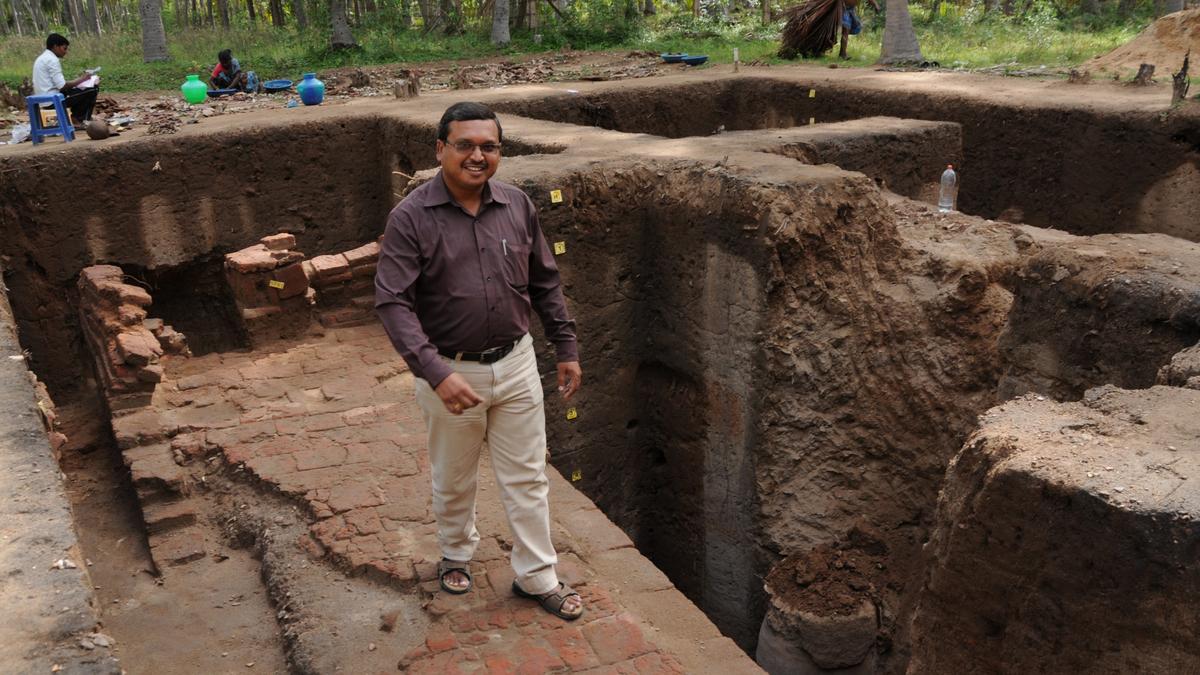
- 24 May 2025
In News:
The Keezhadi archaeological site, located near Madurai along the Vaigai River in Tamil Nadu’s Sivaganga district, is a major site of cultural and historical significance. It offers compelling evidence of an urban, literate, and industrialized Tamil civilization dating back to the Sangam Age.
Background and Discovery
- Discovered: Surveys in 2013–14; Excavations began in 2015.
- Excavating Agencies: Initially conducted by the Archaeological Survey of India (ASI) and later by the Tamil Nadu State Archaeology Department.
- Excavated Area: Only 1 out of 100 acres has been explored; over 4,000 artefacts recovered.
Significant Findings
- Carbon Dating (AMS) of charcoal: Indicates urban habitation existed by 200 BCE.
- Key Discoveries: Brick structures, ring wells, pottery with Tamil-Brahmi inscriptions, beads, graffiti, water storage facilities, and a large decorative pot unique to the region.
- Artefacts suggest links with North India and Western trade networks.
Cultural and Historical Significance
- Suggests early urbanization in South India, independent of northern influence.
- Supports theories of a pre-Sangam urban Tamil culture.
- Establishes Keezhadi as a centre of literacy, trade, and craftsmanship.
- Mention of nearby settlements like Manalur and Konthagai in Tamil classics such as Tiruvilayadal Puranam strengthens the site's literary links.
Sangam Period Context
- Spanned approximately 3rd century BCE to 3rd century CE.
- Tamil academies or ‘Sangams’ under the Pandya dynasty produced extensive literature.
- Notable texts: Tolkappiyam, Ettuthogai, Pattupattu, Padinenkilkanakku, and epics like Silappadikaram, Manimekalai, and CivakaCintamani.
- Literature depicts advanced socio-political systems, agriculture, trade, and maritime activities.
Current Issues and ASI Involvement
- The excavation report prepared by archaeologist Amarnath Ramakrishna (submitted in January 2023) has been returned by ASI for revision to ensure:
- Accurate period classification.
- Better stratigraphic and cartographic details.
- Consistency in scientific dating and layer mapping.
- ASI has flagged the need for clearer mapping, missing illustrations, and precise scientific justification for dating claims, especially for Period I (8th to 5th century BCE).
Controversy and Criticism
- Concerns have been raised over delays in publishing excavation reports.
- Critics highlight a perceived bias in the handling of southern archaeological sites, pointing to similar delays with the Adichanallur site report.
- Experts stress the importance of transparent and timely reporting to enhance historical understanding.
National Centre for Polar and Ocean Research (NCPOR)
- 24 May 2025
In News:
To mark its 25th anniversary, the Union Minister of Earth Sciences inaugurated two landmark facilities—Polar Bhavan and Sagar Bhavan—at the NCPOR campus in Vasco da Gama, Goa.
About NCPOR
- Established: 25 May 1998 (originally as the National Centre for Antarctic and Ocean Research – NCAOR).
- Status: Autonomous R&D institute under the Ministry of Earth Sciences (MoES).
- Headquarters: Vasco da Gama, Goa.
- Governing Body: Includes 13 members; the Secretary of MoES serves as the ex-officio Chairman.
Mandate and Key Functions
- Polar Research Leadership:
- Manages India's scientific stations:
- Antarctica: Maitri and Bharati
- Arctic: Himadri
- Himalayas: Himansh
- Coordinates India’s Antarctic, Arctic, Southern Ocean, and Himalayan expeditions.
- Manages India's scientific stations:
- Oceanic Research:
- Implements projects under the Deep Ocean Mission.
- Conducts Exclusive Economic Zone (EEZ) mapping and continental shelf surveys.
- Explores deep-sea minerals, gas hydrates, and metal sulphides.
- Policy Implementation:
- Supports India’s Arctic Policy (2022) and Indian Antarctic Act (2022):
- Antarctic Act: Provides legal framework for governance and environmental protection via CAG-EP (Committee on Antarctic Governance and Environmental Protection).
- Arctic Policy: Based on six pillars—science, environment, development, connectivity, governance, and capacity building.
- Supports India’s Arctic Policy (2022) and Indian Antarctic Act (2022):
- Scientific Logistics and Collaboration:
- Operates research vessels (e.g., ORV Sagar Kanya).
- Engages in international polar networks and climate monitoring programs.
- Maintains India’s Antarctic Data Centre and conducts climate modelling.
New Facilities at NCPOR
Polar Bhavan:
- Area: 11,378 sq. m | Cost: ?55 crore
- Features:
- Advanced polar and ocean research laboratories
- Science on Sphere (SOS) 3D visualization platform
- Accommodation for 55 scientists
- Conference halls, library
- Home to India’s first Polar and Ocean Museum
Sagar Bhavan:
- Area: 1,772 sq. m | Cost: ?13 crore
- Features:
- Two -30°C ice core laboratories
- +4°C storage units for biological and sediment samples
- Class 1000 clean room for trace metal and isotope studies
Significance for India
- Strengthens India’s strategic presence in polar regions.
- Enhances research capacity in ocean and climate sciences.
- Enables India to fulfill international obligations under polar treaties.
- Promotes science diplomacy and public outreach through the upcoming museum.
Guttala Inscription
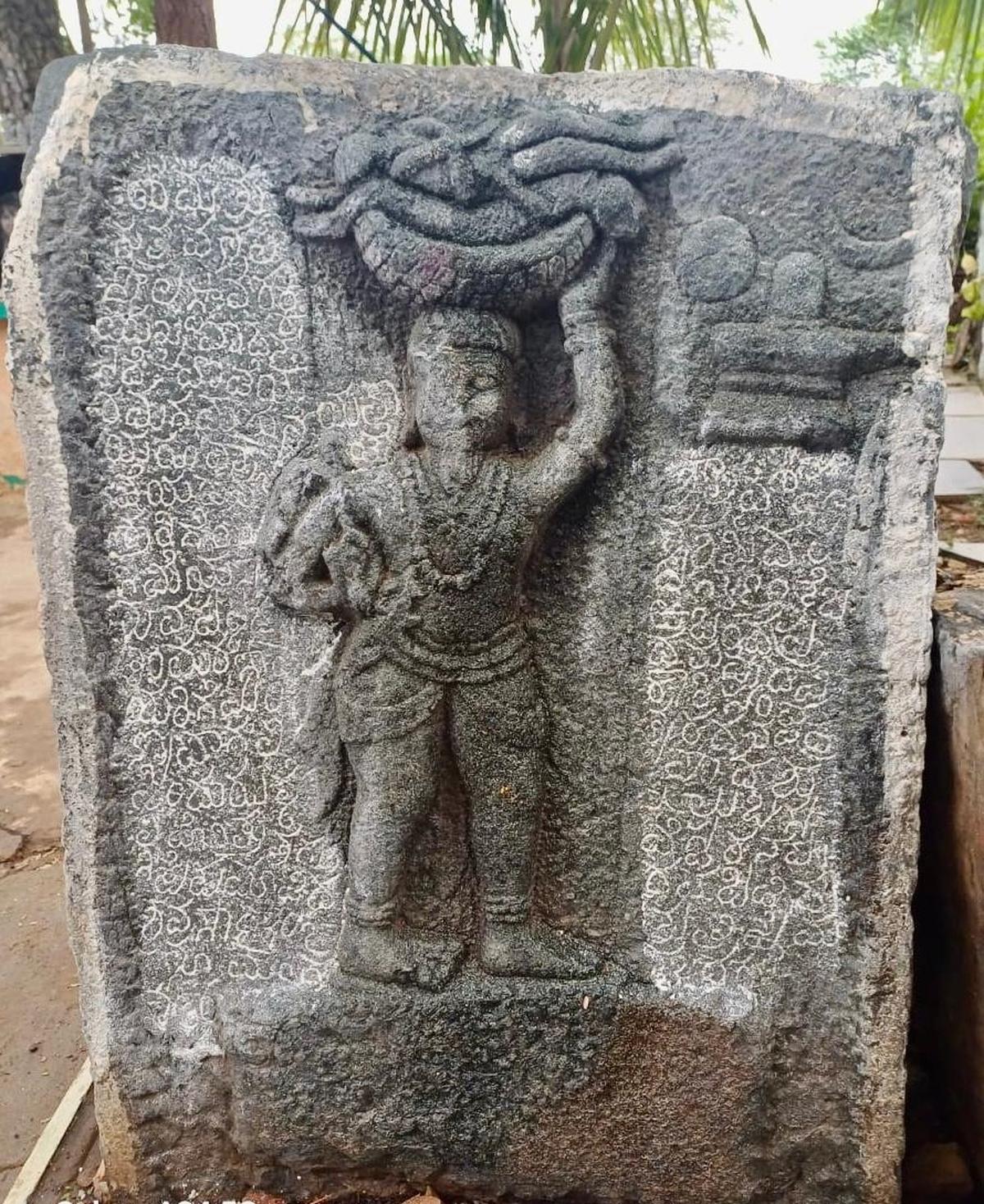
- 24 May 2025
In News:
A rare 16th-century sculptural inscription discovered near the Chandrashekara temple in Guttala village, Haveri district, Karnataka, marks the earliest known epigraphic evidence in India of a large-scale humanitarian disaster caused by a natural calamity—a drought (bara) that claimed 6,307 lives in 1539 CE (Saka 1461, August 18).
Key Features of the Inscription:
- Language and Script: Kannada.
- Medium: Stone slab.
- Depiction: A sculpture showing MarulaihOdeya, the son of NanidevaOdeya, carrying a basket containing dead bodies—representing his act of burying the deceased to earn religious merit for the regional ruler, TimmarasaSvami.
- Religious Context: The burial was conducted after paying homage to Basaveshwara, reflecting the spiritual and ritualistic practices of the time.
- Territorial Reference: Mentions the term "seeme", indicating the existence of local administrative divisions.
Significance:
- First explicit historical record in India of deaths caused by a natural disaster, making it an important source for disaster history and epigraphic heritage.
- Offers textual and visual representation of community response to drought.
- Provides insights into local governance, religious customs, and socio-economic conditions of 16th-century Karnataka.
- Adds depth to the study of historical climate events, with potential to track past climatic patterns and their impact on populations.
Broader Context:
- Inscriptions in India, typically engraved on stone or metal, serve as valuable primary sources for understanding royal decrees, battles, donations, and societal events.
- Other notable Karnataka inscriptions include:
- Maski Edict (3rd Century BCE) – First mention of Emperor Ashoka as "Devanampriya".
- Halmidi Inscription (c. 450 CE) – Oldest Kannada inscription referencing Kadamba king Kakusthavarma.
- Aihole Inscription (634 CE) – Chronicles the military achievements of Pulakeshin II.
Recent Epigraphic Developments:
- The Epigraphy Branch of the Archaeological Survey of India (ASI) discovered and documented over 1,000 inscriptions across India during 2024–25, including more than 100 new finds this year alone.
- These discoveries reinforce the role of epigraphy in reconstructing Indian history, especially in areas lacking detailed literary sources.
Weather Balloons and Global Forecasting Concerns
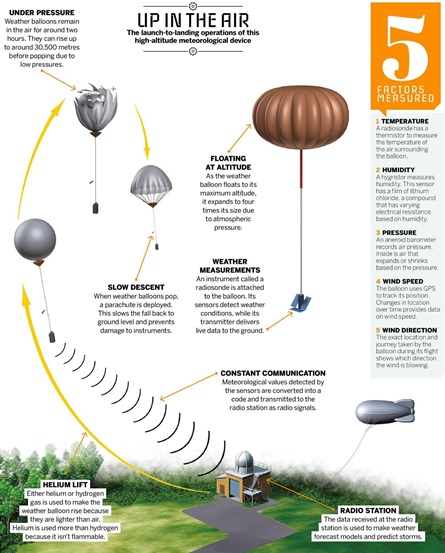
- 24 May 2025
Background:
Weather balloons, crucial for upper atmospheric observations, are facing reduced deployment in the United States due to recent budget cuts. The National Oceanic and Atmospheric Administration (NOAA) has significantly scaled back balloon launches since March 2025 following a 25% budget reduction. This has raised global concerns among meteorologists over the potential decline in forecast accuracy.
What are Weather Balloons?
- Inventor: Léon Teisserenc de Bort (France), first launched them in 1896; discovered the tropopause and stratosphere.
- Composition: Latex balloons filled with helium or hydrogen.
- Altitude: Can ascend up to 1,15,000 feet (35 km) in approximately 2 hours.
- Instrument Carried: Radiosonde – a small device suspended ~66 feet below the balloon that transmits real-time atmospheric data (temperature, pressure, humidity, wind) via radio signals.
- Technology: Modern radiosondes are lightweight, GPS-enabled, and energy-efficient.
Historical Context:
- Initial upper-air measurements in the 18th century used kites with meteorographs.
- Weather balloons replaced kites due to higher altitude capability and improved data reliability.
- The introduction of radiosondes in the 1930s revolutionized weather forecasting by enabling real-time data transmission.
Importance of Upper Air Observations
- Upper atmosphere (>5,000 feet) plays a vital role in generating surface-level weather conditions like rain, storms, and drought.
- Weather balloons help bridge the data gap between surface stations and satellites by offering vertical atmospheric profiles.
- Twice-daily launches at 0000 UTC and 1200 UTC (~5:30 AM and 5:30 PM IST) are globally coordinated at over 900 stations, including 56 in India.
India’s Scenario
- The India Meteorological Department (IMD) conducts routine balloon launches for weather forecasting.
- The National Balloon Facility (NBF) in Hyderabad, jointly managed by ISRO and TIFR, supports high-altitude atmospheric research.
Impact of Reduced Launches
- NOAA’s scaling down has sparked fears of reduced forecast accuracy globally.
- A similar move by Russia in 2015 led to a measurable decline in forecast quality across Europe, highlighting the critical role radiosondes play.
- NOAA plans to replace some balloon data with AI-powered alternatives developed by private firms to reduce costs.
Why Weather Balloons Still Matter in the Satellite Era
- Satellites provide large-scale imagery but lack the granularity of vertical atmospheric data.
- Weather balloons offer crucial insights into lower- and mid-atmospheric layers where storms and climate dynamics form.
- Radiosonde data is essential for calibrating satellite measurements, ensuring reliability in climate modeling and forecasting systems.
Sagar Mein Samman (SMS) Initiative
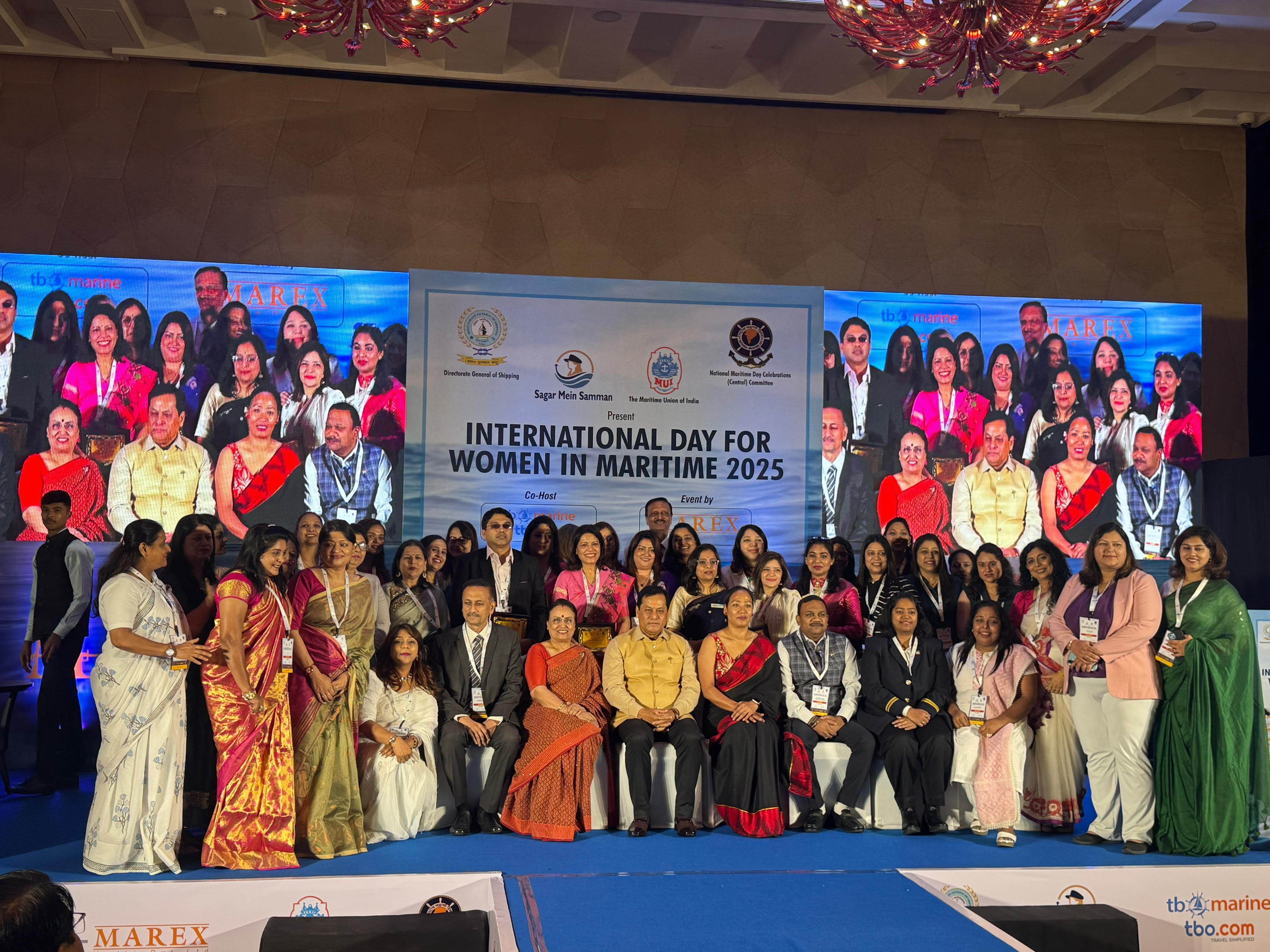
- 24 May 2025
In News:
The Government of India launched the Sagar Mein Samman (SMS) initiative on International Day for Women in Maritime (18 May), observed by the International Maritime Organization (IMO). The 2025 theme is “An Ocean of Opportunities for Women.”
About the Initiative:
- Objective: To build a gender-equitable maritime workforce by promoting inclusivity, safety, skill development, leadership, and equal opportunities for women across seafaring and shore-based maritime operations.
- Alignment:
- IMO’s gender inclusion mandate.
- UN SDG-5 (Gender Equality).
- India’s Diversity, Equity, and Inclusion (DEI) framework.
- Maritime India Vision 2030 and Maritime Amrit Kaal Vision 2047.
Key Features:
- Structured Policy Roadmap covering:
- Planning & strategy.
- Training & development.
- Research & innovation.
- Governance & compliance.
- Outreach & communications.
- Financial Support: ~2,989 women received assistance since 2014.
- Incentives for Industry: Shipping companies are incentivized to hire women; scholarships support training.
Achievements:
- 649% growth in women seafarers:From 341 in 2014 to 2,557 in 2024.
- Rise in financial aid beneficiaries:From 45 in 2014-15 to 732 in 2024-25.
- Female representation target:12% in technical maritime roles by 2030.
- Increasing employment of Indian women on Indian and foreign-flagged ships.
Recognition and Outreach:
- Women Leaders Honoured: Ten outstanding women were felicitated for their contributions to maritime.
- Focus on awareness campaigns, onshore job facilitation, and leadership opportunities.
Significance:
- Aims to dismantle gender-based barriers and promote inclusive economic growth.
- Reinforces India’s commitment to gender equity as a strategic enabler of maritime sustainability and national development.
- Aligns with global maritime norms and India’s broader commitment to SDGs.
Other Key Maritime Initiatives:
- SAGAR (Security and Growth for All in the Region): Maritime security and regional cooperation.
- Maritime India Vision 2030: Long-term strategy for port-led development and gender inclusion.
BrahMos-NG and Extended Range BrahMos
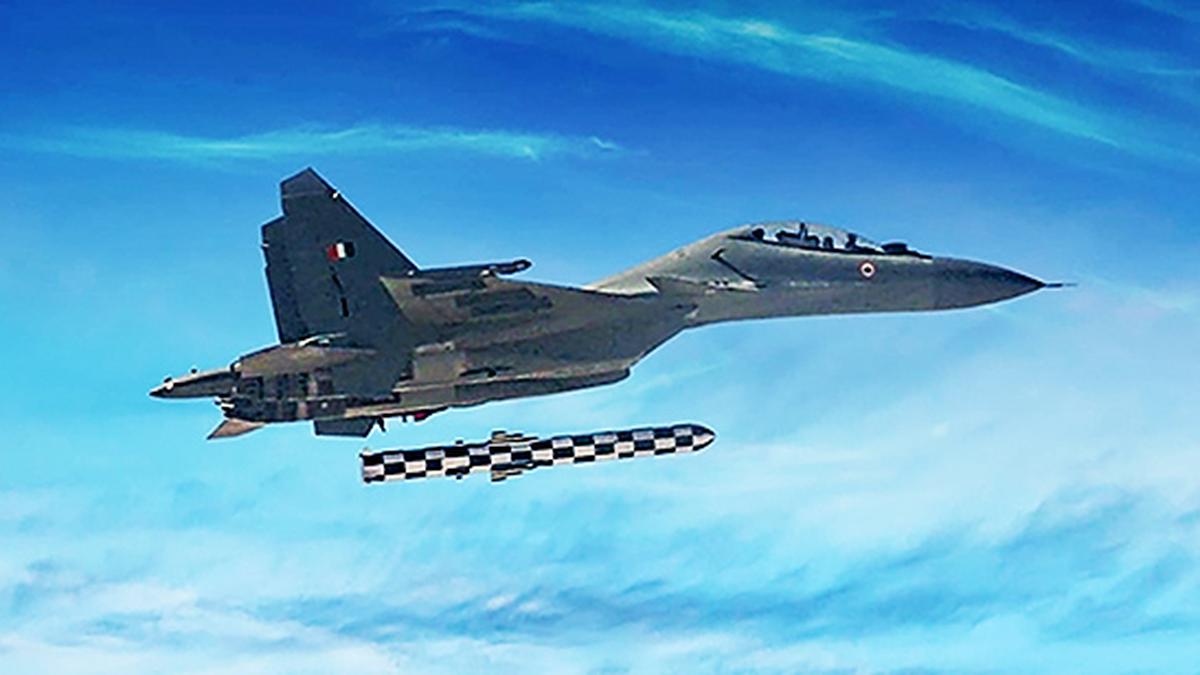
- 23 May 2025
In News:
India is advancing its supersonic missile capabilities with the development of two significant assets:
- The BrahMos-NG (Next Generation) missile—lighter, stealthier, and more versatile.
- The extended-range BrahMos, which pushes the missile’s reach up to 800 km, enhancing India’s strategic depth.
About BrahMos:
- Joint Venture: BrahMos Aerospace (DRDO of India and Russia’s NPO Mashinostroyenia).
- First Induction: 2005 (anti-ship version).
- Name Origin: Combines names of Brahmaputra (India) and Moskva (Russia) rivers.
- Capabilities: Launch from land, sea, sub-sea, and air against land and sea targets.
BrahMos-NG (Next Generation):
A miniaturized, next-gen supersonic cruise missile designed for enhanced operational flexibility and platform compatibility.
Key Features:
- Size & Weight: ~1.33–1.5 tonnes, nearly half the current air-launched BrahMos (2.5–2.65 tonnes).
- Speed: Mach 2.8.
- Range: ~400–450 km; potential for 800 km with future trials.
- Stealth: Lower radar cross-section and advanced stealth design.
- Platforms: Compatible with Su-30MKI, LCA Tejas, Rafale, MiG-29, naval ships, and submarines.
- Launch Options: From air, land vehicles, surface warships, and submarine torpedo tubes.
- Advanced ECCM: Improved resistance against electronic warfare/jamming.
- Precision Targeting: Ideal for land-attack, anti-ship, and underwater combat scenarios.
Strategic Benefits:
- Higher platform density: E.g., a Su-30MKI can carry up to 4 BrahMos-NG missiles; Tejas can carry 2.
- Faster deployment and reload cycles due to reduced size and logistics burden.
- Future-ready design: Modular, stealthy, and agile—ideal for modern warfare.
Extended-Range BrahMos:
- Background: Initial range capped at 290 km under Missile Technology Control Regime (MTCR).
- Post-MTCR Membership: India joined MTCR in 2016, enabling range extension.
- Current Status: Successfully extended to 450 km; testing ongoing for 800 km version.
- Trial Update: Initial flight trial of the 800 km version conducted; more planned.
Operational Highlights:
- Combat Proven: BrahMos was used by the IAF for precision strikes on Pakistani airbases during the 2024 confrontation, demonstrating effective penetration of enemy air defence.
- Deterrence Capability: Former Air Chief Marshal V.R. Chaudhari called BrahMos-NG the IAF’s "primary deterrent weapon".
- Squadron Integration: 222 ‘Tiger Sharks’ squadron in Thanjavur equipped with BrahMos-armed Su-30MKIs.
Financial Fraud Risk Indicator (FRI)
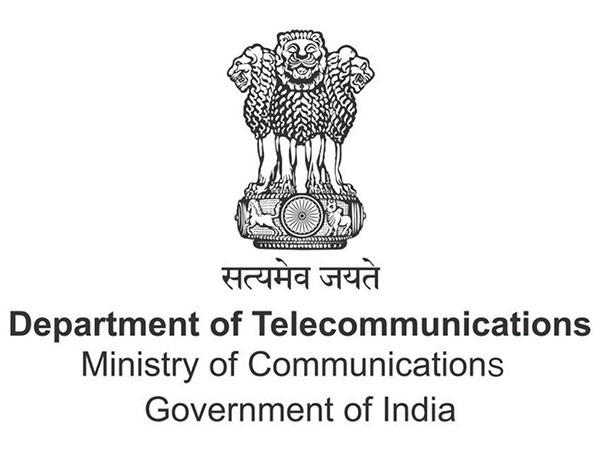
- 23 May 2025
In News:
The Department of Telecommunications (DoT), under the Ministry of Communications, has launched the Financial Fraud Risk Indicator (FRI) to counter the growing menace of cyber-enabled financial frauds, especially those involving mobile numbers.
What is FRI?
The Financial Fraud Risk Indicator (FRI) is a multi-dimensional analytical tool developed under the Digital Intelligence Platform (DIP). It classifies mobile numbers based on their risk level—Medium, High, or Very High—of being associated with financial fraud.
Purpose:
- To provide advance risk intelligence to financial institutions.
- To serve as a pre-transaction validation tool, flagging suspicious mobile numbers involved in digital transactions.
How It Works:
- The classification is based on data inputs from:
- National Cybercrime Reporting Portal (NCRP)
- DoT’s Chakshu facility
- Intelligence from banks and NBFCs
- Risk-tagged mobile numbers are flagged in real-time to stakeholders, including banks, UPI platforms, and payment service providers.
- Acts as a cyber shield, preventing fraudulent digital payments before they occur.
Implementation and Use Cases:
- PhonePe, an early adopter, uses FRI to:
- Block transactions involving "Very High" risk numbers.
- Warn users during transactions with "Medium" risk numbers via its "PhonePe Protect" feature.
- Other UPI giants like Google Pay and Paytm (collectively handling 90% of UPI traffic) are integrating FRI-based alerts.
- Banks have begun introducing transaction delays and alerts to curb cyber fraud using FRI data.
Why FRI is Crucial:
- India lost over ?3,207 crore to approximately 5.82 lakh cyber fraud cases between FY 2020–2024.
- The short operational window of fraudulent mobile numbers makes advance detection vital.
- Common cyber frauds include:KYC scams, UPI frauds, investment scams, digital arrest frauds, and get-rich-quick schemes.
Supporting Mechanisms:
- Digital Intelligence Platform (DIP): Facilitates real-time intelligence sharing between law enforcement and financial institutions.
- Chakshu on Sanchar Saathi: Enables citizens to report suspicious communication.
- Citizen Financial Cyber Fraud Reporting System: Part of I4C, it allows real-time fraud reporting via the 1930 helpline or cybercrime.gov.in.
- E-Zero FIR: Automatically registers FIRs for cybercrime complaints involving more than ?10 lakh.
- Mulehunter (RBI): AI-based tool to identify and track money mule accounts.
Blue Talks
- 23 May 2025
In News:
Recently, India successfully hosted the Second Blue Talks in New Delhi, organised by the Ministry of Earth Sciences (MoES) in collaboration with the Embassies of France and Costa Rica. This high-level consultation platform aims to contribute to the upcoming 3rd United Nations Ocean Conference (UNOC3) scheduled from June 9–13, 2025 in Nice, France.
About Blue Talks
- Purpose: A multilateral platform for dialogue among governments, scientists, civil society, and stakeholders to promote the sustainable use of ocean resources and accelerate progress on Sustainable Development Goal (SDG) 14 – Life Below Water.
- Key Objectives:
- Promote marine sustainability, research, and education.
- Facilitate global scientific cooperation on ocean-related challenges.
- Share best practices and strategic knowledge tools.
- Strengthen consensus and policy alignment in the lead-up to UNOC3.
- Thematic Focus Areas of 2nd Blue Talks:
- Conservation and Restoration of Marine and Coastal Ecosystems.
- Scientific Cooperation, Marine Technology, and Ocean Literacy.
- Reduction of Marine Pollution from land and sea-based sources.
- Interlinkages among Oceans, Climate, and Biodiversity.
Highlights of the Event:
- White Paper Released: Transforming India’s Blue Economy: Investment, Innovation, and Sustainable Growth.
- Aim: To align government action, mobilize investments, and promote sustainable ocean development.
- Notable Themes:
- Mapping of marine resources.
- Promotion of offshore wind and deep-sea exploration.
- Technology and data-sharing gaps.
- Women-led seaweed farming, smart ports, and green ship recycling as success models.
About the 3rd United Nations Ocean Conference (UNOC3)
Feature Details
Host Countries France and Costa Rica
Venue & Dates Nice, France; June 9–13, 2025
Organiser United Nations
Theme “Accelerating action and mobilizing all actors to conserve and
sustainably use the ocean.”
Goal Strengthen global efforts under SDG 14
Key Outcome Nice Ocean Action Plan – a non-binding but politically influential declaration.
Focus Areas Marine conservation, pollution reduction, global partnerships, and
BBNJ ratification.
UN Ocean Conference Series
- 1st UNOC (2017): New York, USA – Raised awareness and voluntary commitments.
- 2nd UNOC (2022): Lisbon, Portugal – Focused on innovation and science-driven approaches.
- 3rd UNOC (2025): Nice, France – Aims to intensify action and collaboration.
India’s Blue Economy Vision
- India's Blue Economy is a critical pillar of the Viksit Bharat 2047 vision.
- MoES is the nodal agency for national ocean governance.
- The white paper integrates efforts from 25 ministries and all coastal states/UTs.
- Builds on India’s G20 Presidency and Chennai High-Level Principles for a Sustainable and Resilient Blue Economy.
International Booker Prize 2025
- 23 May 2025
In News:
In a historic win, Banu Mushtaq, a prominent Kannada writer, advocate, and activist, became the first Indian author writing in Kannada to win the International Booker Prize 2025 for her short story collection Heart Lamp. The book was translated into English by Deepa Bhasthi, who also became the first Indian translator to win this prestigious award.
About the International Booker Prize
- Established: 2005 by the Booker Prize Foundation, UK.
- Awarded: Annually.
- Purpose: To honour the best work of fiction translated into English, regardless of the original language or nationality of the author.
- Prize Amount: £50,000, shared equally between the author and the translator.
- Shortlisted nominees (authors and translators) receive £2,500 each.
- Focus: Unlike the Booker Prize, which honours original English-language works, the International Booker Prize exclusively celebrates translated fiction, highlighting the importance of translators in global literature.
Key Features
- Celebrates literary excellence, cultural richness, and the art of translation.
- Initially biennial (2005–2015), it became an annual award in 2016.
- Books must be translated into English and published in the UK or Ireland.
India and the International Booker Prize
Year Author Work Language Translator
2022 Geetanjali Shree Tomb of Sand Hindi Daisy Rockwell
2025 Banu Mushtaq Heart Lamp Kannada Deepa Bhasthi
About Banu Mushtaq
- Born: April 3, 1948, in Hassan, Karnataka.
- Professions: Advocate, journalist, feminist writer, women’s rights activist, and former municipal councillor.
- Affiliation: Prominent figure in the Bandaya movement, known for protest literature in Kannada addressing social injustices.
- Journalistic Background: Reported for LankeshPatrike (1981–1990) under the mentorship of P. Lankesh.
Literary Contributions
- Started writing: In 1974; first story published in Prajamatha.
- Themes: Focuses on gender justice, religious identity, caste oppression, and female autonomy.
Heart Lamp: The 2025 Winning Work
- Genre: Short story collection comprising 12 stories written between 1990 and 2023.
- Content: Explores the lives of ordinary South Indian Muslim women, addressing themes like patriarchy, faith, family roles, and self-determination.
- Significance:
- First short story collection to win the International Booker Prize.
- First Kannada-language work to win.
- First win for Indian translator Deepa Bhasthi.
Other Notable Works by Banu Mushtaq
- Benki Male (1999): Awarded the Karnataka Sahitya Academy Award.
- HaseenaMattuItaraKathegalu (2015): Translated into English as Haseena and Other Stories.
- Black Cobra (Short Story): Adapted into the award-winning film Hasina by Girish Kasaravalli.
India’s Primary Forest Loss: 2024 Insights and Conservation Measures
- 23 May 2025
In News:
According to the latest 2024 data by Global Forest Watch (GFW) and the University of Maryland, India lost 18,200 hectares of primary forest in 2024, a slight increase from 17,700 hectares in 2023.
Primary forests are mature, humid tropical forests that have not been entirely cleared or regrown in recent history.
Key Highlights:
Globally, 6.7 million hectares of tropical primary forest were lost in 2024—almost double the loss in 2023.
For the first time in over two decades, wildfires surpassed agriculture as the leading driver of tropical forest loss, accounting for nearly 50% of the global total. This spike is largely attributed to climate change and El Niño, which intensified heatwaves and droughts.
Major Global Trends (2024)
- Brazil: Accounted for 42% of global tropical forest loss.
- Bolivia: Recorded a 200% rise in forest loss, overtaking the Democratic Republic of Congo.
- Fires: Emerged as the dominant cause of forest destruction globally.
India: Forest Cover Trends and Data (2001–2024)
- India lost 2.31 million hectares of tree cover since 2001—equivalent to a 7.1% decrease and 1.29 gigatonnes of CO? equivalent emissions.
- Humid primary forest loss between 2002 and 2024 stood at 3,48,000 hectares (5.4%), accounting for 15% of the total tree cover loss.
- Annual primary forest loss (in hectares):
- 2024: 18,200
- 2023: 17,700
- 2022: 16,900
- 2021: 18,300
- 2020: 17,000
- 2019: 14,500
2024 Indian Forest Loss Patterns
- Overall Tree Cover Loss: Decreased by 6.9% compared to 2023.
- Humid Primary Forest Loss: Rose by 5.9% in 2024.
- Fire-Induced Forest Loss: Increased to 950 hectares (a 158% rise from 2023).
- Regional Hotspots: Northeastern states such as Assam, Nagaland, and Mizoram, driven by shifting cultivation, logging, and agricultural expansion.
According to the UN Food and Agriculture Organisation (FAO), India had the second-highest rate of deforestation globally from 2015 to 2020, with an annual forest loss of 6.68 lakh hectares.
India’s Forest Conservation Measures
Policy and Legal Framework
- Forest Conservation Act, 1980 (Amended 2023): Regulates diversion of forest land for non-forest purposes. Amendments aim to streamline processes while raising concerns about potential dilution of protections.
- National Forest Policy, 1988: Advocates maintaining 33% of geographical area under forest/tree cover.
- Compensatory Afforestation Fund Act (CAMPA), 2016: Ensures reforestation and eco-restoration using funds from forest land diversion.
Afforestation and Reforestation
- Green India Mission: Under the National Action Plan on Climate Change (NAPCC); focuses on increasing forest cover and ecosystem resilience.
- State Initiatives: Example – Uttar Pradesh plans to plant 35 crore saplings in 2025.
Community Participation
- Joint Forest Management (JFM): Encourages community–forest department collaboration.
- Forest Rights Act, 2006: Legally empowers forest-dwelling communities to manage and conserve forests.
Technological Tools
- Satellite Monitoring: Real-time surveillance of forest cover and illegal activities.
- Mobile Apps: Tools like ‘My Plants’ facilitate public engagement in plantation efforts.
International Partnerships
- Forest-PLUS 3.0: A joint initiative with the United States, promoting sustainable forestry and climate resilience.
About Global Forest Watch (GFW)
- A project by the World Resources Institute (WRI), established in 1997.
- An open-access platform offering near real-time forest monitoring data.
- Users: Governments, NGOs, academia, journalists, and the public.
- Technology: Uses Landsat satellite imagery and region-specific algorithms to track forest change.
SPICED Scheme
- 22 May 2025
In News:
The Spices Board of India, under the Ministry of Commerce and Industry, has introduced the SPICED Scheme (Sustainability in Spice Sector through Progressive, Innovative and Collaborative Interventions for Export Development) for the financial year 2025–26.
Key Objectives
The SPICED initiative is designed to:
- Promote sustainability and innovation in spice farming.
- Enhance productivity and quality of major spices like small and large cardamom.
- Encourage organic cultivation, GI-tagged spice production, and value addition.
- Improve post-harvest processing standards.
- Ensure compliance with international food safety and phytosanitary regulations.
- Strengthen the export ecosystem and support spice stakeholders, including farmers, SHGs, and MSMEs.
Major Components and Interventions
The scheme extends financial assistance and capacity-building support across the spice value chain, including:
1. Agricultural Support
- Rejuvenation and replanting of cardamom plantations.
- Development of water sources and micro-irrigation systems.
- Promotion of organic farming and Good Agricultural Practices (GAPs).
2. Post-Harvest Infrastructure
- Installation of modern processing machinery such as dryers, dehullers, slicers, and grading systems.
- Assistance to farmers and Farmer Producer Organizations (FPOs) for acquiring spice-specific equipment like:
- Turmeric boilers
- Spice polishers
- Mint distillation units
- Threshers
3. Entrepreneurship and Innovation
- Establishment of Spice Incubation Centres to promote product development and branding.
- Support for startups and MSMEs in accessing markets and improving competitiveness.
4. Capacity Building
- Training and extension activities to disseminate knowledge on best practices and technical know-how.
- Skill enhancement for Self-Help Groups (SHGs), farmers, and FPOs.
5. Export Promotion
- Facilitation of participation in international trade fairs, buyer-seller meets, and market linkage events.
- Financial aid prioritised for:
- First-time exporters
- Small and medium enterprises (SMEs)
- Registered exporters with a valid CRES (Certificate of Registration as Exporter of Spices).
Governance and Transparency
- All scheme activities will be geo-tagged.
- Status of applications, fund allocation, and beneficiary details will be made available on the Spices Board's website to ensure transparency and accountability.
INSV Kaundinya
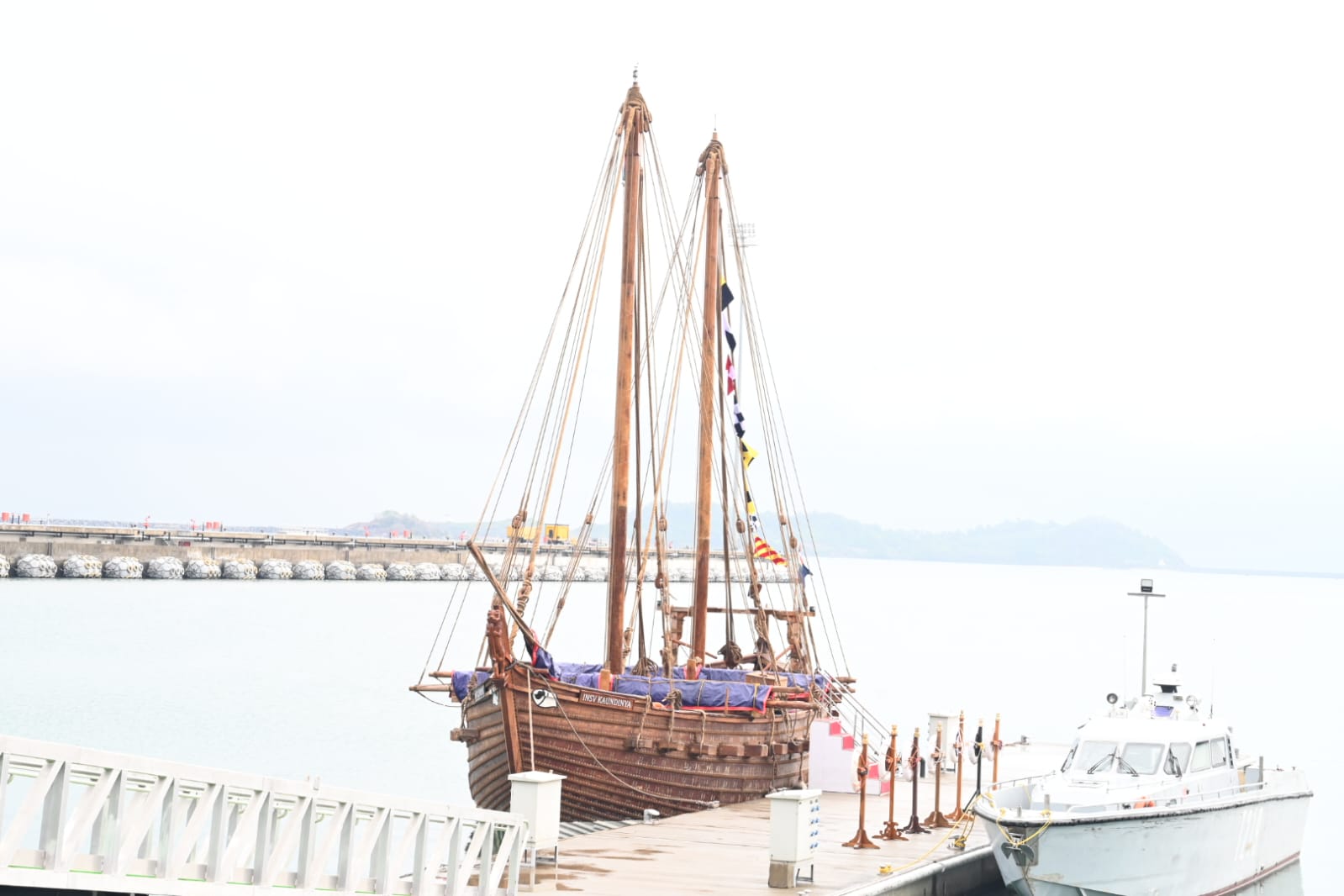
- 22 May 2025
In News:
The Indian Navy formally inducted and named an ‘ancient stitched sail ship’ as the INSV Kaundinya at a ceremonial event held at the Naval Base in Karwar. INSV Kaundinya has been built based on a 5th century ship depicted in paintings seen in the Ajanta Caves.
What is INSV Kaundinya?
The INSV Kaundinya is a reconstructed ancient stitched ship, modeled after maritime imagery found in the Ajanta Cave murals. It represents India’s historical naval engineering capabilities and cultural exchanges across the Indian Ocean.
Construction and Origins
- The project was initiated in July 2023 as a collaborative effort between the Ministry of Culture, the Indian Navy, and Hodi Innovations.
- The ship was built using traditional stitched shipbuilding methods, where wooden planks are lashed with coir ropes and coconut fibre, sealed with natural resin—a method that avoids the use of nails or metal fasteners.
- The design took inspiration from 5th-century depictions in the Ajanta caves, interpreted through archaeological analysis, hydrodynamics, and naval architecture, as no original ship designs from that era have survived.
Planned Expedition
- INSV Kaundinya is slated to retrace an ancient maritime trade route in 2025, sailing from Gujarat to Oman, highlighting India's historical seafaring ties with West Asia.
Cultural Symbolism
- The ship’s sails are embellished with traditional motifs such as the Gandabherunda (a two-headed mythical eagle) and Sun iconography, symbolizing resilience and energy.
- A SimhaYali (lion-dragon hybrid) figure adorns the bow, a nod to Dravidian maritime symbolism.
- The deck features a Harappan-style stone anchor, linking the vessel to India’s ancient Indus Valley maritime practices.
- Named after Kaundinya, an ancient Indian voyager known for establishing early trade and cultural links with Southeast Asia, the ship reflects India's historic role in transoceanic interaction.
Ajanta Cave Paintings: Artistic Reference
- Located in Maharashtra, the Ajanta Caves date from the 2nd century BCE to the 6th century CE, renowned for some of the oldest surviving Indian mural art.
- These murals use the tempera technique—painting on dry plaster with natural dyes such as red ochre and black.
- They largely portray Buddhist narratives, including Jataka Tales, and scenes from the Buddha’s life, interwoven with nature and decorative elements.
- The paintings emphasize emotional expression, spiritual depth, and distinctive anatomical stylization.
Mizoram Becomes India’s First Fully Literate State
- 22 May 2025
In News:
Mizoram has officially become India’s first fully literate state, attaining a literacy rate of 98.2% according to the Periodic Labour Force Survey (PLFS) 2023–24. This achievement surpasses the 95% threshold defined by the Ministry of Education to classify a region as fully literate.
Definition of Literacy
- As per the Office of the Registrar General of India, a literate person is someone aged 7 years or above who can read and write with understanding in any language.
- Under NEP 2020 and in alignment with SDG 4.6, the definition has expanded to include the ability to read, write, and compute with comprehension, and includes digital and financial literacy and critical life skills.
India’s Literacy Landscape (2023–24)
- National Literacy Rate: 80.9% (age 7+)
- Mizoram: 98.2% (Highest; now declared fully literate)
- Ladakh: First UT to achieve full functional literacy under ULLAS
- Lowest Literacy Rates: Andhra Pradesh (72.6%), Bihar (74.3%)
ULLAS – Nav Bharat SaakshartaKaryakram
The achievement is attributed to the ULLAS (Understanding Lifelong Learning for All in Society)programme, a centrally sponsored scheme running from 2022 to 2027, aligned with the National Education Policy (NEP) 2020.
Key Features:
- Target Group: Adults aged 15 years and above who missed formal education.
- Implementation: Based on volunteerism and the principle of Kartavya Bodh (sense of duty).
- Components:
- Foundational Literacy and Numeracy
- Critical Life Skills (including digital, legal, financial literacy)
- Basic Education
- Vocational Skills Development
- Continuing Education
- Assessment: Foundational Literacy and Numeracy Assessment Test (FLNAT) is conducted periodically for certification.
- Digital Tools: Resources provided through the DIKSHA platform and the ULLAS mobile/web portal in regional languages.
What is Functional Literacy?
Functional literacy refers to an individual's ability to apply reading, writing, and numeracy in daily tasks, enabling personal development and community participation.
Other Key Educational Initiatives
- PM SHRI Schools
- Sarva Shiksha Abhiyan
- PRAGYATA (Digital Education)
- Mid-Day Meal Scheme
- BetiBachaoBetiPadhao
- National Programme on Technology Enhanced Learning (NPTEL)
Asiatic Lion Census 2025
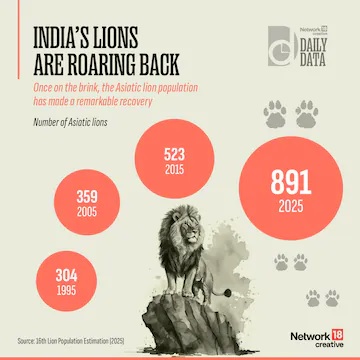
- 22 May 2025
In News:
According to the 16th Asiatic Lion Census (2025) conducted by the Gujarat Forest Department, the Asiatic lion (Panthera leopersica) population has grown from 674 in 2020 to 891 in 2025, marking a 32.2% increase in five years.
Key Highlights:
- Core Areas (Protected Forests & Sanctuaries): 384 lions
- Non-Forest Areas: 507 lions (up from 340 in 2020)
- 44.22% of the total population now lives outside traditional protected zones.
- Gir National Park, along with Gir Wildlife Sanctuary and Pania Wildlife Sanctuary, holds 394 lions—the core population.
- Amreli district leads with 257 lions, while Mitiyala Wildlife Sanctuary has seen its count double to 32.
- Barda Wildlife Sanctuary near Porbandar recorded 17 lions, marking a population return since 1879.
- New satellite populations identified near Jetpur and Babra-Jasdan.
- Adult Females: 330 recorded—a 27% increase since 2020, indicating strong reproductive potential.
Census Methodology
The 2025 census employed direct beat verification, a statistically rigorous method:
- The landscape was divided into zones and sub-zones.
- Personnel included officials, enumerators, supervisors, and volunteers.
- Unlike the tiger census (which spans 2 years), the lion census was completed in just 3 days.
Project Lion (Launched in 2020)
Aimed at ensuring the long-term conservation of Asiatic lions, Project Lion focuses on:
- Habitat restoration
- Strengthening the prey base
- Human-wildlife conflict mitigation
- Monitoring via advanced technology, including:
- Radio-collars
- Camera traps
- Global Positioning System (GPS) tracking
- GIS-based real-time surveillance
- AI-driven tools likeSIMBA, e-GujForest, andAlert Generation System
- Automated sensor grids (magnetic, motion, infrared)
Habitat and Legal Status
- Natural Habitat: Grasslands, open woodlands, savannas, and scrublands.
- Main Range: Gir Forests in Gujarat; Barda Wildlife Sanctuary emerging as a second habitat.
- Legal Protection:
- Schedule I and IV of the Wildlife (Protection) Act, 1972
- Appendix I of CITES
- IUCN Status: Vulnerable
Distinctive Traits
- Smaller in size compared to African lions.
- Males have a moderate mane allowing visible ears.
- A distinct belly fold—rare in African lions.
- No fixed breeding season.
Global Conservation Context
India is a founding member of the International Big Cats Alliance (IBCA), launched in 2023 to enhance global cooperation on big cat conservation, including lions.
Additionally, the IUCN’s Green Status of Species (2025) introduced a recovery-based conservation framework. Lions are currently classified as "Largely Depleted", highlighting the need for sustained and collaborative conservation actions.
e-Zero FIR System
- 22 May 2025
IN News:
In a significant stride toward modernizing cybercrime response mechanisms, Union Home Minister Amit Shah unveiled the e-Zero FIR system. This initiative ensures that complaints involving financial cyber frauds exceeding ?10 lakh—submitted via the 1930 helpline or the National Cybercrime Reporting Portal (NCRP)—are automatically registered as FIRs, eliminating the need for the complainant to visit a police station.
Objective and Operational Rollout
The project, developed under the guidance of the Indian Cyber Crime Coordination Centre (I4C), is aimed at accelerating the registration and investigation of high-value cybercrime cases.
- Pilot Implementation: Initiated in Delhi as a testbed.
- National Expansion: Plans are underway to replicate the model across India.
Concept of Zero FIR
The Zero FIR mechanism permits the filing of an FIR at any police station, regardless of the location of the offence. This removes jurisdictional constraints and ensures prompt registration of cases.
- Legal Backing: Incorporated under Section 173 of the BharatiyaNagarik Suraksha Sanhita (BNSS), 2023.
- Historical Context: Introduced following recommendations from the Justice Verma Committee post the 2012 Nirbhaya case, to address delays caused by jurisdictional rigidities.
Salient Features of Zero FIR
- No Jurisdictional Restrictions: Victims may file complaints at any police station or via electronic means.
- Initial Registration: The complaint is logged as a Zero FIR and then forwarded to the relevant jurisdictional police unit for investigation.
- Primary Goal: To facilitate timely intervention and prevent procedural delays for the complainant.
Integration with National Digital Systems
To enhance responsiveness and coordination, the e-Zero FIR system integrates with several key digital platforms:
- NCRP (National Cybercrime Reporting Portal) – Administered by I4C.
- Delhi Police’s e-FIR mechanism
- Crime and Criminal Tracking Network and Systems (CCTNS) – Maintained by theNational Crime Records Bureau (NCRB).
This digital infrastructure enables real-time complaint registration at Delhi’s e-Crime Police Station, which then redirects the FIR to the appropriate jurisdiction.
Alignment with New Criminal Legislation
The initiative is fully aligned with India’s revised criminal justice framework effective from July 1, 2024, which includes:
- Bharatiya Nyaya Sanhita (BNS), 2023
- BharatiyaNagarik Suraksha Sanhita (BNSS), 2023
- BharatiyaSakshyaAdhiniyam (BSA), 2023
Under the BNSS provisions:
- Mandatory Zero FIR registration under Section 173.
- Victim must visit a cybercrime police station within 72 hours to convert a Zero FIR into a formal FIR.
- Free copy of FIR to be provided to the complainant, ensuring transparency and empowering victims.
Vision for a Cyber-Secure India
The launch of the e-Zero FIR system underscores the government’s resolve to build a secure and digitally empowered India by:
- Ensuring easy and immediate access to justice for victims of cyber fraud.
- Facilitating quick action by investigative agencies without procedural bottlenecks.
- Strengthening citizen trust through digital governance and victim-friendly policing.
Elimination of Trachoma as a Public Health Problem
- 21 May 2025
In News:
At the 78th World Health Assembly in Geneva (May 2025), the World Health Organization (WHO) officially recognized Papua New Guinea (PNG) and India for eliminating trachoma as a public health problem. This marks a significant milestone in global efforts to combat neglected tropical diseases (NTDs).
What is Trachoma?
- Cause: Bacterial infection by Chlamydia trachomatis
- Transmission:
- Direct contact with infected eye/nasal discharges (via hands, clothes, bedding)
- Flies that have come into contact with infected discharges
- Reservoir: Predominantly spread among children in endemic regions
- Symptoms:
- Early: Red eyes, discharge, pain, light sensitivity
- Advanced:Trachomatous trichiasis – inward-turning eyelashes causing corneal damage and irreversible blindness
Risk Factors & Epidemiology:
- Major Risk Factors:
- Poor hygiene and sanitation
- Overcrowded housing conditions
- Limited access to clean water
- Gender Disparity: Women are 4 times more affected due to caregiving-related exposure
- Global Burden (as of 2023):
- Endemic in 38 countries
- Affects 1.9 million people with visual impairment/blindness
- Over 130,000 surgeries and 32.9 million antibiotic treatments administered globally in 2023
Trachoma Elimination in Papua New Guinea (2025):
- Validation: Based on detailed epidemiological data and surveillance (2015–2020)
- Key Findings:
- Presence of mild active trachoma in children but negligible trichiasis
- No need for mass drug administration or surgical interventions
- Intervention Strategy:Emphasis on surveillance, community-level assessments, andtargeted response
- Support & Partnerships:WHO, Fred Hollows Foundation, Australian DFAT, PNG Eye Care, London School of Hygiene & Tropical Medicine, among others
- Significance: First NTD eliminated in PNG; part of WHO’s NTD Road Map 2021–2030
Trachoma Elimination in India (Certified in May 2025):
- Timeline:
- Declared trachoma-free in October 2023
- WHO Certification in May 2025
- India’s Strategy:
- Implemented active surveillance through NPCBVI since 2019
- National Trichiasis Survey (2021–2024) covered 200 districts
- Regional Achievement:India is the third country in WHO South-East Asia Region, after Nepal and Myanmar, to eliminate trachoma
Global Status of Trachoma Elimination:
- Countries Validated for Elimination: 22 countries including India, Nepal, China, Pakistan, Iran, Morocco, Vietnam, Mauritania, and PNG
- Part of Broader NTD Goals: WHO supports member countries to eliminate at least one NTD under the 2021–2030 roadmap
Shirui Lily Festival
- 21 May 2025
In News:
The 5th State-Level Shirui Lily Festival resumed in Ukhrul district, Manipur from May 20–24, 2025, after a two-year pause due to ethnic unrest. It marks a symbolic step towards peace, as it involved significant movement through previously restricted areas with heightened security.
About the Shirui Lily Festival:
- Organised by: Manipur Tourism Department
- First Held: 2017
- Venue:Shirui Village, Ukhrul District
- Objective: Promote eco-tourism and create awareness about the endangered Shirui Lily
- Special 2025 Edition: Commemorates the 75th anniversary of the discovery of the Shirui Lily
Key Features (2025 Edition):
- Cultural Events: Traditional dances, gospel rock shows, and live performances at the ShiRock music festival
- Eco-Initiatives: Trash collection drives and conservation awareness campaigns
- Competitions:
- SheChef Cooking Contest (vegetarian & childhood memory dishes)
- Miss Shirui Lily 2025 beauty pageant
- Sports (football, wrestling, tug of war, mini-marathon)
- Adventure Activities: Ziplining, camping, biking
- Special Ceremonies: Unveiling of the 75th Anniversary Memorial and a drone show
- Closing Function: Hosted by senior officials from the Ministry of Tourism
About Shirui Lily (Lilium mackliniae):
- Botanical Name:Lilium mackliniae
- Discovered by: Botanist Frank Kingdon-Ward in 1946, named after his wife Jean Macklin
- Local Name:KashongTimrawon
- Geographic Range: Exclusively found in the Shirui Hills (2,673 m altitude) of Ukhrul district
- State Flower of Manipur
Ecological and Cultural Significance:
- Endemic Habitat: The species is not viable for transplantation outside its native micro-climate
- Flowering Season: April to June, marked by a breathtaking bloom of pinkish-white bell-shaped flowers
- Cultural Reverence: Associated with the local deity Philava, symbolising spiritual and ecological identity of the Tangkhul Naga tribe
- Global Recognition: Awarded by the Royal Horticultural Society at the London Flower Show in 1950
Conservation Status and Efforts:
- Threats: Habitat loss, invasive species, and climate change
- Conservation Status:Endangered
- Scientific Interventions: ICAR-NEH, under Dr. Manas Sahoo, has developed micropropagation techniques for in-situ conservation
India’s Climate Physical Risk (CPR)
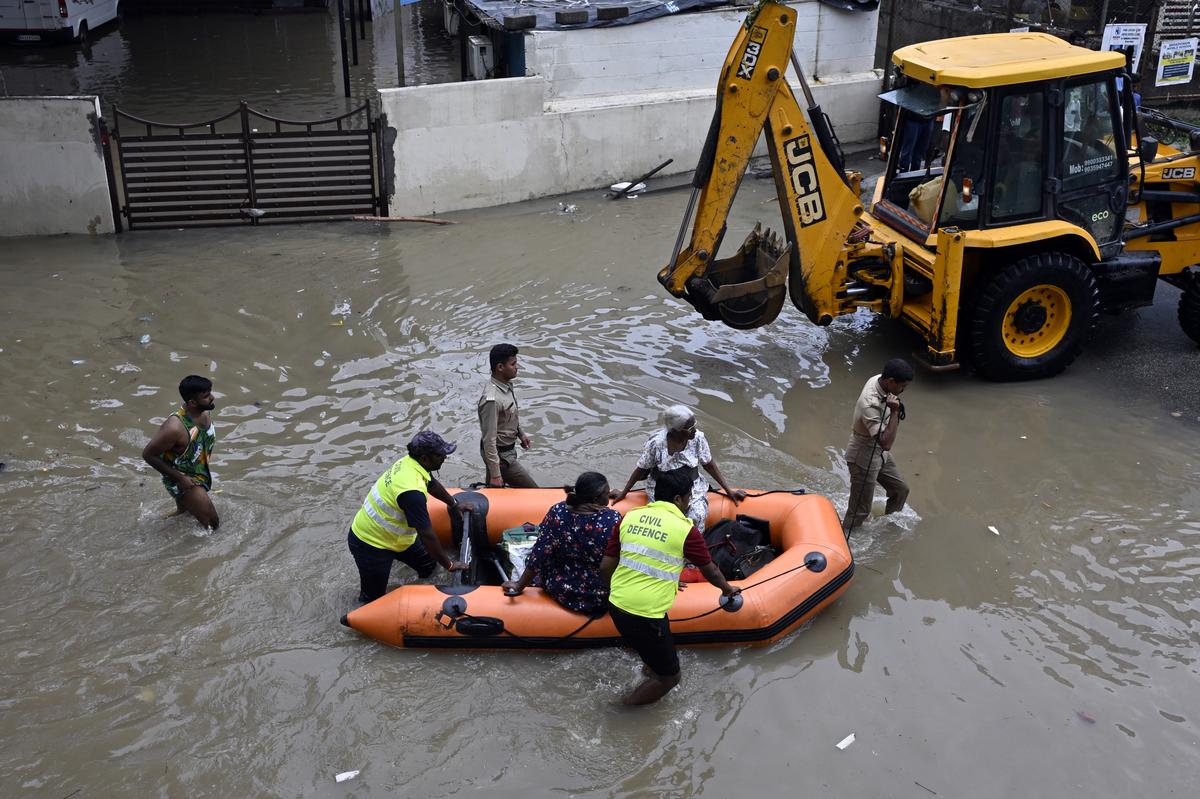
- 21 May 2025
In News:
Amid rising climate-induced disasters—floods, heatwaves, droughts—the Union Home Minister recently called for proactive climate risk assessments. India, however, lacks a comprehensive and standardised system to assess Climate Physical Risks (CPR), exposing critical gaps in preparedness.
What is Climate Physical Risk (CPR)?
Definition: CPR refers to the potential damage from:
- Acute events: Floods, cyclones, heatwaves.
- Chronic stresses: Changing monsoon patterns, droughts.
IPCC Formula:
CPR = Hazard × Exposure × Vulnerability
- Hazard: Climate threats like floods or wildfires.
- Exposure: Presence of people/assets in risk-prone areas.
- Vulnerability: System's capacity to withstand and recover.
Why CPR Assessment Matters for India
- High Risk: Over 80% of Indians reside in districts exposed to climate disasters (World Bank).
- Systemic Threat: Affects not just the environment, but public health, agriculture, economy, and national security.
- Future-proofing Development: Long-term planning must consider CPR for sustainable infrastructure and financial stability.
Challenges in India’s CPR Management
- Fragmented Efforts: Multiple agencies (IMD, IITs, NIDM) conduct isolated studies with no integration.
- Lack of Standardised Data: No central repository for CPR metrics at the district or panchayat level.
- Modelling Limitations: Global models like RCPs and SSPs fail to capture India's hyper-local climate variations.
- Private Sector Constraints: Businesses lack tools to evaluate climate risks across supply chains.
Global Best Practices
- Mandatory Climate Disclosures: Global frameworks like ISSB S2 and EU Taxonomy require companies to report CPRs.
- Adaptation as Priority: Nations, including the Global North, are investing in adaptation infrastructure, recognizing its economic returns.
- UNEP estimates: $1 in adaptation = $4 saved in disaster recovery.
Initiatives by India
- Adaptation Communication (2023): India’s first report to the UNFCCC under Article 7 of the Paris Agreement.
- National Adaptation Plan (NAP): In progress; covers 9 thematic sectors with district-level focus.
- RBI Framework: Climate risk integrated into financial supervision and regulatory assessments.
Irula Tribe of Tamil Nadu
- 21 May 2025
In News:
In Tamil Nadu’s Kunnapattu, Irula families who have lived on the land for generations face eviction and denial of rights, as nearly half remain without legal ownership or recognition.
Who are the Irulas?
- Ethnic Group: Indigenous Dravidian community, primarily in Tamil Nadu and parts of Kerala.
- Constitutional Status: Recognized as a Scheduled Tribe and classified under Particularly Vulnerable Tribal Groups (PVTGs) in Tamil Nadu.
- Population: Second largest Adivasi group in Tamil Nadu.
- Language: Speak Irula, a Dravidian language related to Tamil and Kannada.
- Traditional Occupations: Snake-catching, healing, collection of forest produce, cattle rearing, and agricultural labour.
- Religious Beliefs: Pantheistic with reverence for spirits; worship Kanniamma (virgin goddess associated with cobras).
- Living Structures: Reside in small clusters called mottas, typically located on hill edges near forests.
Irulas and Snake Venom Economy
- The Irula Snake Catchers’ Cooperative Society supplies nearly 80% of venom for the production of anti-snake venom (ASV) in India.
- The community uses traditional knowledge to locate and capture snakes humanely, extract venom, and release them safely.
The Crisis in Kunnapattu and Beyond
Core Issue: Denial of Land Rights
- In Kunnapattu village, near Mamallapuram, ~40 Irula families have lived for generations. However, nearly 20 families lack legal land documents (pattas).
- The land is classified as meikalporamboke (grazing land), making it ineligible for patta allocation under current policies.
- Without pattas, families are denied access to electricity, government housing, and welfare schemes.
Government Response
- Officials proposed relocation with promised housing and legal ownership, but Irulas resist displacement due to ancestral ties, rituals, and local livelihoods.
- Affected families submitted multiple petitions, seeking in-situ recognition rather than relocation.
Broader Pattern across Tamil Nadu
Similar Issues in Other Villages
- Ottiyambakkam, Iyankulam, Keerapakkam, Chinnakayar, and Nemmeli show the same trend: ancestral tribal settlements without legal tenure, facing:
- Forced or incentivized relocation.
- Inadequate or delayed infrastructure (roads, electricity, water).
- Joint pattas that complicate individual welfare access.
Urbanization vs Indigenous Habitat
- Irula hamlets are increasingly surrounded or displaced by real estate developments.
- Some families resist high-rise housing due to loss of space, cultural disconnect, and impracticality for community rituals.
Notable Success: Senneri Model Village
- Near Chengalpattu, Senneri-Hanumantapuram-Dargesh is a model Irula settlement:
- Home to Padma Shri awardees in snake-catching.
- Over 10 active SHGs working in traditional medicine.
- Gender-inclusive education and organized habitation.
- However, even here, funding and timely housing construction remain challenges.
Challenges and Needs
- Lack of individual pattas limits access to electricity, housing schemes (e.g., PMAY-G), water, sanitation, and health services.
- Infrastructural gaps persist even in relocated areas.
- Traditional knowledge and community bonds are under threat from urban pressures and displacement.
Titan’s Dynamic Atmosphere
- 21 May 2025
In News:
In a significant breakthrough, NASA scientists using the James Webb Space Telescope (JWST) and Hawaii’s W. M. Keck Observatory have captured first-ever evidence of convective cloud activity in the northern hemisphere of Titan, Saturn's largest moon. The observations were conducted in November 2022 and July 2023.
About Titan:
- Second-largest moon in the Solar System (after Jupiter’s Ganymede).
- Only moon known to have a dense atmosphere and liquid hydrocarbon bodies (methane and ethane lakes/seas).
- Exhibits Earth-like weather, including clouds, rainfall, and seasonal cycles, making it unique among planetary satellites.
Key Findings:
- Clouds were observed in the mid- and high-latitudes of Titan’s northern hemisphere, the region where most of its methane seas (e.g., Kraken Mare, Ligeia Mare) are located.
- This marks the first confirmed evidence of convection-driven weather in Titan’s north, suggesting active atmospheric dynamics during Titan’s summer season.
- These findings expand our understanding of Titan’s methane cycle, which parallels Earth’s hydrological cycle, though methane replaces water.
- The JWST also detected a key organic molecule — the methyl radical, a reactive compound with an unpaired electron, involved in complex hydrocarbon chemistry.
- This is significant because sunlight and Saturn’s charged particles break apart methane in Titan’s atmosphere, initiating prebiotic chemical reactions.
Scientific Significance:
- Offers a rare opportunity to study active chemical processes in real time — likened by scientists to seeing "a cake rising in the oven" instead of just its ingredients or finished form.
- Enhances understanding of prebiotic chemistry and the potential for habitability on icy celestial bodies.
- Builds on the legacy of the Cassini–Huygens mission (2004–2017), which studied Titan’s southern hemisphere.
Dragonfly Mission: The Next Leap
- NASA's Dragonfly, a nuclear-powered octocopter, is scheduled for launch in 2028 (on a SpaceX Falcon Heavy) and expected to reach Titan in 2034.
- Aims to conduct in-situ analysis of Titan’s surface, hopping between locations to study chemistry, weather, and possible signs of life.
- Recently passed the Critical Design Review, moving into the manufacturing phase.
About the W.M. Keck Observatory:
- Located at Mauna Kea, Hawaii, at 4,200 m elevation — ideal for infrared astronomy.
- Houses two 10-meter telescopes (Keck I and II), the world’s largest optical/infrared system.
- Features segmented mirrors and real-time computer-actuated adjustments for precision imaging.
- Uses stressed mirror polishing, a major advancement in off-axis mirror technology.
58thJnanpith Award Conferred
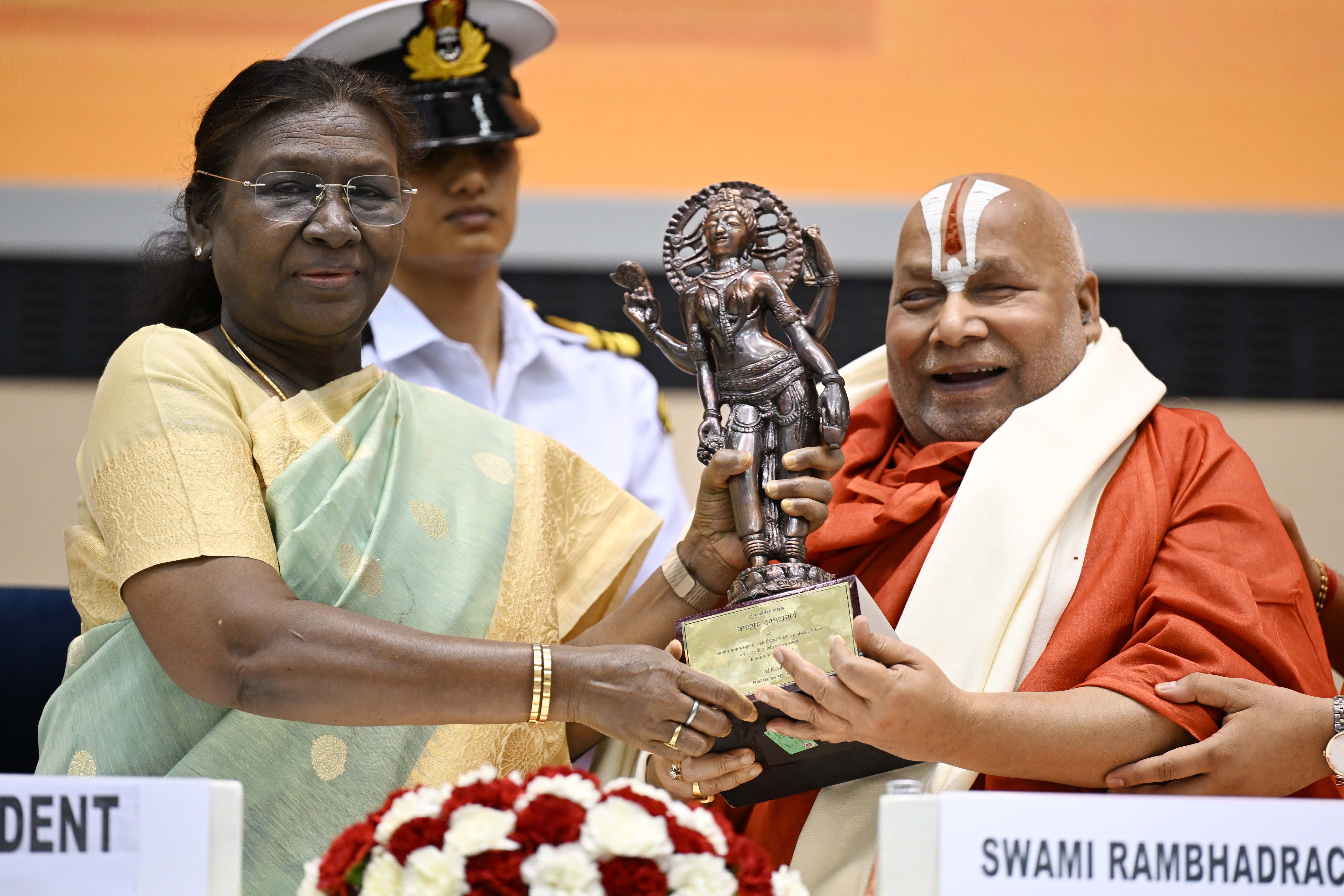
- 20 May 2025
In News:
Recently, the President of India, presented the 58thJnanpith Award to renowned Sanskrit scholar Jagadguru Rambhadracharya Ji at a function held at Vigyan Bhavan, New Delhi. She also extended congratulations to celebrated writer Gulzar, a fellow recipient who could not attend due to health reasons.
About Jagadguru Rambhadracharya
- A prominent Sanskrit scholar, spiritual leader, poet, and educationist.
- Despite being visually challenged, he has made significant literary and social contributions.
- Recognized for his multi-faceted excellence in Sanskrit literature and devotion to nation-building through literary and cultural service.
Highlights from the President’s Address
- Emphasized that literature unites and awakens society, playing a key role in movements from 19th-century social reform to the freedom struggle.
- Referenced the literary legacy of figures like Valmiki, Vyas, Kalidas, and Rabindranath Tagore as embodiments of India’s civilizational essence.
- Praised the BharatiyaJnanpith Trust for honoring literary excellence since 1965 across various Indian languages.
- Celebrated the contributions of women Jnanpith awardees such as Ashapurna Devi, Amrita Pritam, Mahasweta Devi, and Pratibha Ray, urging young women to draw inspiration from their works.
About the Jnanpith Award
Feature Details
Established 1961
First Awarded 1965 to Malayalam poet G. SankaraKurup for Odakkuzhal
OrganisedBy BharatiyaJnanpith, a literary and cultural organization founded in 1944
Eligibility Indian citizens writing in Schedule VIII languages of the Constitution or
in English
Award Components Cash prize, citation, and a bronze replica of Vagdevi (Saraswati)
Nature Annual, but may be withheld if no suitable candidate is found
One-Time Recognition A writer can receive the award only once
Language Rotation Rule A language that has received the award is ineligible for the next two years
New Calcedonia
- 20 May 2025
In News:
For decades, New Caledonia, a French island territory of approximately 2,71,400 people in the southwest Pacific Ocean, has been on a complex journey regarding its status.
Geography and Strategic Significance
- Location: South Pacific Ocean, ~1,500 km east of Australia.
- Status: French overseas territory; part of EU’s Overseas Countries and Territories (OCTs), but outside the Euro and Schengen zones.
- Key Resources: Holds ~25% of the world’s nickel reserves.
- UNESCO Heritage: Lagoons and coral reefs recognized in 2008.
- Capital: Nouméa
Demographics (2019 Census)
- Population: ~2,71,400
- Indigenous Kanaks: ~39%
- Others: European, Polynesian, Vietnamese, Indonesian, Algerian descent.
Historical Timeline
- 1853: France annexes the islands; becomes a penal colony.
- 1957: French citizenship granted to all residents.
- 1980s: Ethnic tensions escalate; near civil war.
- 1988: Matignon Agreements signed.
- 1998: Nouméa Accord grants wide autonomy, New Caledonian citizenship, and promised three referendums on independence.
Independence Referendums
- 2018 & 2020: Majority voted against independence.
- 2021: Final vote boycotted by pro-independence groups (FLNKS) citing COVID-19 and customary mourning; outcome rejected as illegitimate.
Recent Crisis (2024)
- Trigger: French proposal to “unfreeze” electoral rolls to include newer residents.
- Consequence: Violent riots, 14 deaths, and widespread unrest.
- Talks Collapse: May 2024 negotiations failed due to rejection of the “sovereignty in partnership” proposal by loyalists.
Sovereignty-in-Partnership Proposal
- Envisioned enhanced self-rule with international recognition.
- Power would be delegated back to France in certain domains (e.g., judiciary).
- Rejected by loyalists as “disguised independence”.
Alternate Proposal by Loyalists
- Partition Model:
- Pro-independence North & Loyalty Islands – special status
- Wealthier, loyalist South Province – remain French
- Rejected by all sides:
- France – violates territorial integrity.
- FLNKS – compared it to apartheid.
What Lies Ahead?
- Provincial Elections due by November 2025.
- No political consensus on institutional status raises concerns of prolonged instability.
Supreme Court Strikes Down Retrospective Environmental Clearances
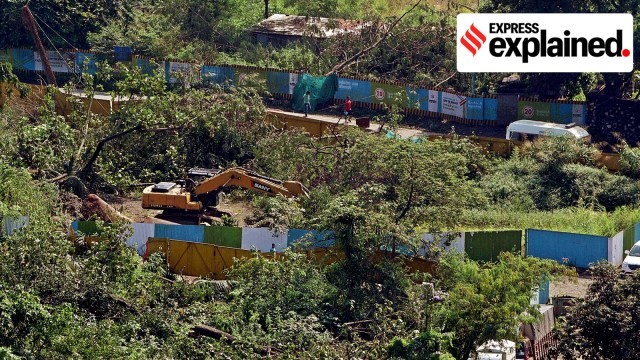
- 20 May 2025
In News:
In a significant verdict for environmental governance, the Supreme Court of India, in the case Vanashakti v. Union of India (May 2025), struck down the 2017 notification and 2021 Standard Operating Procedure (SOP) issued by the Ministry of Environment, Forest and Climate Change (MoEF&CC). These instruments allowed retrospective (ex-post facto) environmental clearances—i.e., granting environmental approval to industries after they had begun operations without prior clearance.
What are Retrospective Environmental Clearances?
- Definition: Ex-post facto clearances permit projects to start operations without prior Environmental Impact Assessment (EIA) approval and seek clearance later.
- Contradiction: These violate the EIA Notification, 2006, issued under the Environment (Protection) Act, 1986, which mandates prior approval before beginning any project impacting the environment.
Details of the 2017 Notification & 2021 SOP
- 2017 Notification:
- Provided a one-time 6-month window for industries that violated clearance norms to regularize operations.
- Central-level appraisal for all cases, regardless of project size or category.
- Violators remained subject to action by State Pollution Control Boards.
- Intended to bring violators under regulatory oversight and ensure remediation costs.
- 2021 SOP:
- Issued to standardize processing of violation cases following an NGT directive.
- Did not use the term “ex-post facto”, but allowed project appraisals after operations began—effectively regularising violations.
- Appraisal Committee: A committee led by NEERI’s former director S.R. Wate appraised such cases over 47 meetings between 2017–2021.
Supreme Court’s Rationale
- Violation of Fundamental Rights:
- Held the 2017 Notification and 2021 SOP unconstitutional as they violate:
- Article 21 – Right to a clean and pollution-free environment.
- Article 14 – Equality before law; violators were unjustly protected.
- Held the 2017 Notification and 2021 SOP unconstitutional as they violate:
- Against Environmental Jurisprudence:
- Reaffirmed past rulings:
- Common Cause v. Union of India (2017)
- Alembic Pharmaceuticals v. Rohit Prajapati (2020)
- These had declared ex-post facto clearances illegal and anathema to environmental law.
- Reaffirmed past rulings:
- On “One-Time” Justification:
- Rejected the Centre’s argument that the 2017 measure was a one-time exception.
- Even a one-time relaxation, the Court said, undermines environmental protections and encourages illegal practices.
- Criticized Centre's Intent:
- Noted that the SOP was a disguised attempt to bring back ex-post facto clearances.
- Warned against such “clever drafting” to bypass the law.
Implications of the Verdict
- Reinforces EIA Norms: Upholds the mandatory prior environmental clearance process under EIA 2006.
- Strengthens Environmental Rule of Law: Emphasizes precautionary principle and polluter pays principle.
- Curtails Regulatory Evasion: Sends a clear message that industries cannot bypass environmental safeguards.
- Protects Public Health: Highlights link between environmental damage and issues like pollution in Delhi.
- Judicial Oversight: Asserts constitutional checks on executive actions that dilute environmental protections.
Operation Olivia
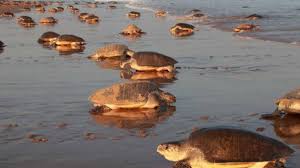
- 20 May 2025
In News:
Operation Olivia is an annual conservation initiative launched by the Indian Coast Guard (ICG) in collaboration with the Odisha Forest Department, aimed at protecting the nesting habitats of Olive Ridley turtles along the Odisha coastline. It is conducted from November to May, aligning with the turtles’ mass nesting (Arribada) season.
Key Features of Operation Olivia (as of 2025)
- In February 2025, a record 6.98 lakh Olive Ridley turtles nested at the Rushikulya river mouth.
- Since inception, the ICG has conducted:
- 5,387 surface patrol sorties
- 1,768 aerial surveillance missions
- 366 boats involved in illegal fishing were detained, ensuring effective protection of the turtles' breeding grounds.
- 225 ship days and 388 aircraft hours were dedicated to Operation Olivia during a recent season.
- Focus areas include Gahirmatha Beach, Rushikulya, and Dhamra river mouths in Odisha—home to over 8 lakh nesting turtles annually.
Conservation Measures
- Fishing ban within 20 km of nesting coasts (Devi, Dhamra, and Rushikulya rivers), enforced under:
- Orissa Marine Fishing Regulation Act, 1982
- Wildlife Protection Act, 1972
- Promotion of Turtle Excluder Devices (TEDs) to reduce accidental bycatch.
- Community awareness campaigns and MoUs with NGOs to ensure local participation and education on marine conservation.
About Olive Ridley Turtles
- Scientific Name:Lepidochelysolivacea
- IUCN Status: Vulnerable
- Legal Protection:
- Schedule I, Wildlife Protection Act, 1972
- Appendix I, CITES
- Habitat: Warm tropical waters of the Pacific, Atlantic, and Indian Oceans
- India’s Nesting Sites:
- Gahirmatha Marine Sanctuary – world’s largest rookery
- Rushikulya and Devi river mouths in Odisha
- Unique Feature: Mass nesting behavior known as Arribada, where thousands of females lay eggs on the same beach.
- Behavior: Omnivorous and solitary; migrate thousands of kilometers annually between feeding and breeding grounds.
Viksit Krishi Sankalp Abhiyan
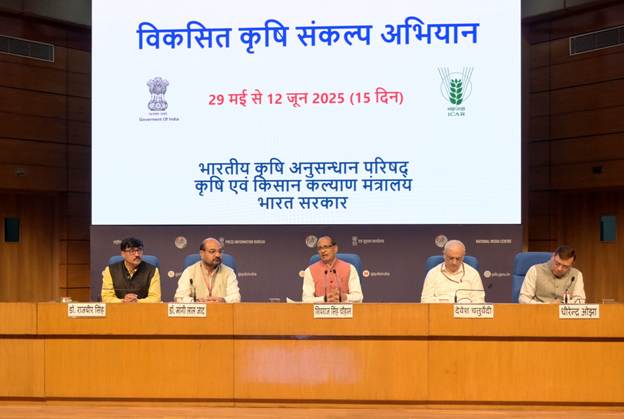
- 20 May 2025
In News:
The Viksit Krishi Sankalp Abhiyan is a nationwide agricultural outreach and awareness initiative being launched by the Ministry of Agriculture & Farmers Welfare from May 29 to June 12, 2025.
The campaign is part of the government’s vision of “Viksit Bharat” and seeks to empower farmers through the dissemination of modern agricultural knowledge, technologies, and innovations across India.
Key Objectives and Vision
- Enhance agricultural productivity, improve farmer incomes, and ensure national food security.
- Promote modern, sustainable, and scientific farming practices aligned with the Prime Minister’s Lab-to-Land vision.
- Strengthen agriculture’s contribution to making India the “Food Basket of the World.”
Campaign Features
- Coverage: 700+ districts, 65,000+ villages, targeting 1.3–1.5 crore farmers
- Organized by: Ministry of Agriculture, ICAR, agricultural universities, and state governments
- Teams Deployed: ~2,170 expert teams with scientists, officials, FPOs, and progressive farmers
- Sessions Held: Morning, afternoon, and evening village-level meetings daily
- Format: Two-way interaction for knowledge dissemination and farmer feedback
Strategic Focus Areas
- Lab-to-Land Technology Transfer:Dissemination of ICAR research, advanced seed varieties, scientific sowing practices, and balanced fertilizer use through 731 Krishi Vigyan Kendras (KVKs).
- Farm Productivity and Resource Use Efficiency:Recommendations based on Soil Health Cards, agro-climatic conditions, water availability, and rainfall data to reduce input costs and promote sustainable practices.
- Farmer Empowerment and Inclusivity:Addressing field-level challenges like pest infestation, enabling participatory feedback loops for future agricultural research.
- Six-Point Strategy by Ministry:
- Increase agricultural output
- Lower production costs
- Ensure fair pricing for farmers
- Compensate disaster-related losses
- Promote crop diversification and value addition
- Encourage natural and organic farming
Notable Achievements and Data
- Record Agricultural Output (2024–25):
- Foodgrains: 3309.18 lakh tonnes (up from 3157.74 lakh tonnes in 2023–24)
- Pulses: 230.22 lakh tonnes
- Oilseeds: 416 lakh tonnes
- Kharif Rice: 1206.79 lakh tonnes
- Wheat: 1154.30 lakh tonnes
- Maize: 248.11 lakh tonnes
- Groundnut: 104.26 lakh tonnes
- Soybean: 151.32 lakh tonnes
- Over 16,000 agricultural scientists are contributing to real-time research translation to the field.
Coral Reefs
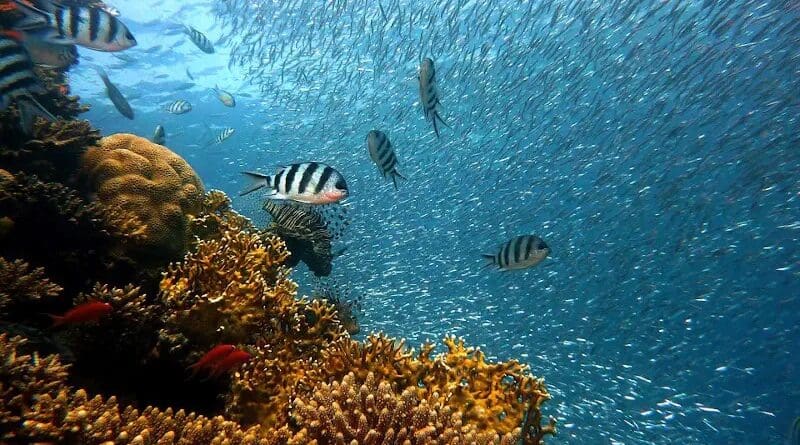
- 19 May 2025
In News:
In a paper published in the Cell Press journal Trends in Biotechnology, researchers demonstrate that the ink could boost coral settlement by more than 20 times, which they hope could contribute to rebuilding coral reefs around the world.
Recent Development in Coral Restoration
- Institution: University of California, San Diego
- Innovation: Development of SNAP-X, a specialized bio-ink.
- Significance: SNAP-X boosts coral larvae settlement by 20 times, marking a major advancement in coral reef restoration, especially vital in the context of climate change-induced reef degradation.
What are Coral Reefs?
- Coral reefs are diverse marine ecosystems formed by colonies of coral polyps, which secrete calcium carbonate to create hard exoskeletons.
- These ecosystems thrive in warm, shallow, and clear tropical waters and are among the most productive on Earth.
Examples of Coral Reefs
- Global: Great Barrier Reef (Australia)
- India: Gulf of Mannar, Lakshadweep Islands
Importance of Coral Reefs
- Biodiversity Hotspots: Support thousands of marine species.
- Coastal Protection: Act as natural barriers against storms and erosion.
- Livelihoods: Sustain tourism and fisheries industries.
- Food Security: Provide fish and other resources to coastal communities.
Types of Coral Reefs
- Fringing Reefs
- Found close to coastlines
- Separated from land by shallow lagoons
- Most widespread type
- Barrier Reefs
- Located farther from shore
- Separated by deeper, wider lagoons
- Example: Great Barrier Reef
- Atolls
- Ring-shaped reefs surrounding a central lagoon
- Often form around subsiding volcanic islands
- Found in the Indian and Pacific Oceans
Favorable Conditions for Coral Reef Growth
Factor Requirement
Water Temperature Around 20°C; typically in tropical zones (30°N to 30°S)
Sunlight Shallow depths (up to ~55 meters) allow photosynthesis
Water Clarity Low nutrient and sediment levels for light penetration
Salinity Stable marine salinity levels
Pollution Minimal; corals are sensitive to chemical/sediment pollutants
Food Supply Plankton-rich water sustains coral polyp
World Food Prize 2025
- 19 May 2025
Latest Winner
- Recipient: Mariangela Hungria, a microbiologist from Brazil.
- Achievement: Recognized for her groundbreaking research in biological seed and soil treatments that improve crop nutrition and yields.
- Her innovations reduce the dependency on chemical fertilizers by helping crops derive nutrients through soil microbes, enhancing sustainable agricultural practices.
About the World Food Prize
- Nature of the Award: A prestigious international honour for outstanding contributions to the global food system.
- Often referred to as the “Nobel Prize for Food and Agriculture.”
Objectives
- Recognizes exceptional efforts in improving the quality, quantity, and accessibility of food worldwide.
- Contributions can come from fields such as:
- Agricultural science & technology
- Food production and nutrition
- Economics, policy, marketing
- Poverty reduction & social science
- Leadership in food security initiatives
Establishment
- Founded in: 1986 by Dr. Norman E. Borlaug, Nobel Peace Prize laureate (1970) and father of the Green Revolution.
- Administered by: The World Food Prize Foundation, with support from public and private sector partners.
Award Details
- Prize Amount: $500,000
- Award Ceremony: Held annually in Des Moines, Iowa, USA, during the Borlaug Dialogue and around World Food Day (October 16).
Historical Note
- India’s Contribution: Renowned agricultural scientist M.S. Swaminathan was the first recipient of the World Food Prize in 1987.
- Honoured for introducing high-yielding wheat and rice varieties in India during the 1960s, contributing to food self-sufficiency.
Mosurafentoni

- 19 May 2025
In News:
A new species named Mosurafentoni—a small, three-eyed sea predator—has been discovered in fossils dating back 506 million years. The findings were published in Royal Society Open Science.
Key Highlights:
- Time Period: Cambrian Period (approx. 506 million years ago)
- Classification: Belonged to Radiodonts, an extinct group related to modern-day arthropods like insects, spiders, and crustaceans.
- Unique Traits:
- Three eyes – with a large third eye on the head.
- Jointed claws – similar to crabs or insects, possibly used for capturing prey.
- Swimming style – moved like a stingray using multiple undulating flaps; referred to as “flying underwater”.
- Body structure – featured a trunk-like segment with 16 parts and gills, aiding respiration.
- Mouth – circular, resembling a pencil sharpener lined with serrated plates for slicing prey.
- Size – around the length of a human finger.
- Nickname: Dubbed the "Sea Moth" due to its flapping motion and size.
Ecological Role
- Likely fed on smaller marine organisms like worms and crustaceans.
- Possibly preyed upon by larger predators such as ancient jellyfish.
Evolutionary Significance
- Shows early arthropod diversity and evolutionary complexity.
- Body structure similarities with modern species like horseshoe crabs and woodlice suggest parallel evolutionary adaptations.
- Helps understand the transition from simple worm-like organisms to complex body plans in early marine ecosystems.
Gyan Bharatam Mission
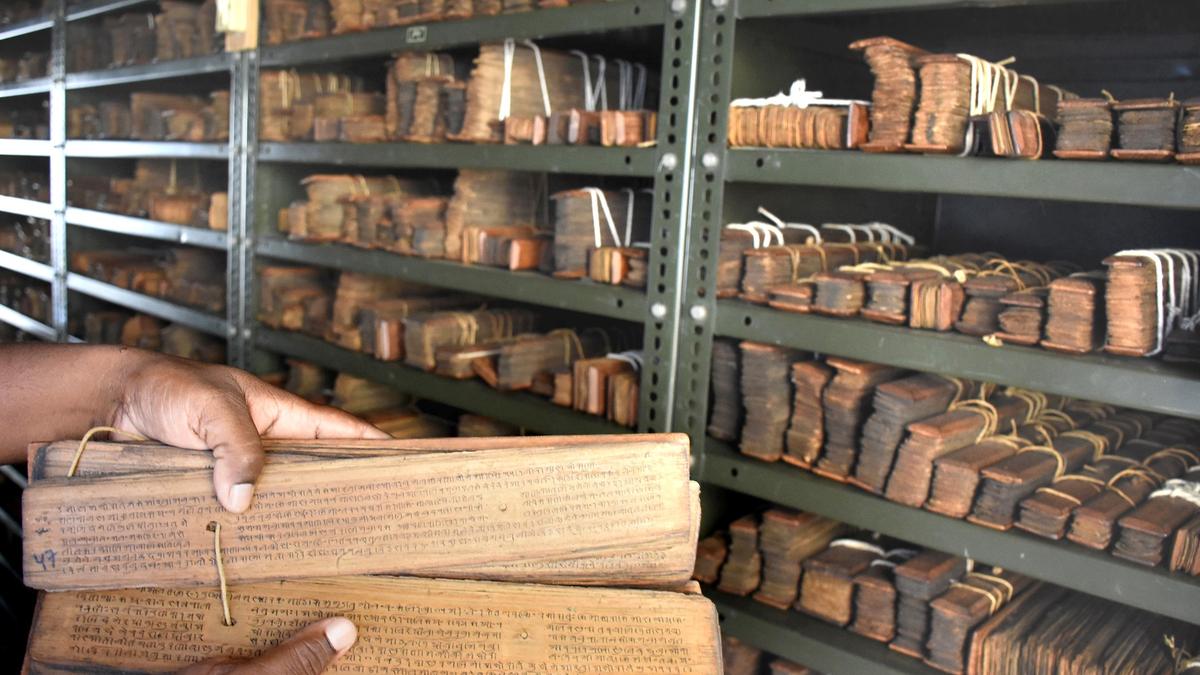
- 19 May 2025
In News:
Prime Minister Narendra Modi will launch the revamped National Manuscripts Mission, which was announced in the Union Budget earlier this year, on June 9.
Key Highlights:
- Implementing Body: Ministry of Culture, Government of India
- Earlier Version: National Manuscripts Mission (est. 2003), under Indira Gandhi National Centre for the Arts (IGNCA)
- Objective:To survey, document, conserve, and digitize over one crore (10 million) Indian manuscripts located in academic institutions, libraries, museums, and private collections.
Key Features
- Massive Coverage: Targets over 1 crore manuscripts, making it India’s largest manuscript preservation project.
- Digital Repository: Creation of a National Digital Repository of Indian Knowledge Systems to ensure accessibility for researchers and the public. Includes AI-powered tools for metadata tagging, translation, and archiving.
- Modern Techniques: Uses advanced scientific conservation methods, including AI and 3D imaging.
- Collaborative Model: Engages academic institutions, libraries, museums, private collectors, and international bodies.
- Budgetary Support: Budget raised from ?3.5 crore to ?60 crore, with a total outlay of ?482.85 crore for 2024–31.
Background and Need
- The earlier NMM (2003) made limited progress. Out of 52 lakh manuscripts surveyed, only 3 lakh titles were digitized, and only 70,000 are currently viewable due to lack of access policy.
- 80% of manuscripts in India are privately owned, underscoring the need for public-private collaboration.
- Over 9 crore folios have been conserved (preventive and curative) in the last two decades.
What is a Manuscript?
A manuscript is a handwritten document (on paper, palm leaf, birch bark, etc.), at least 75 years old, and of historical, scientific, or artistic significance.
Example: The Bakhshali Manuscript (3rd–4th century BCE) is a key Indian text on mathematics, featuring the earliest known use of the symbol for zero.
GRAIL Mission
- 19 May 2025
In News:
The Moon, Earth's only natural satellite, exhibits a striking hemispheric contrast. The nearside, visible from Earth, is dominated by dark, flat basaltic plains (mare), while the farside is rugged, heavily cratered, and lacks these features. This asymmetry has long puzzled scientists.
Recent findings from NASA's GRAIL (Gravity Recovery and Interior Laboratory) mission, launched in 2011, have provided critical insights into this phenomenon.
GRAIL Mission: An Overview
- Objective: To map the Moon’s gravitational field in unprecedented detail.
- Spacecraft: Two identical probes named Ebb and Flow.
- Method: By measuring the tiny variations in the distance between the probes as they orbited the Moon, scientists could infer differences in crust thickness, interior composition, and subsurface structures.
Key discoveries:
- The Moon’s crust is more porous and thinner than previously thought.
- Detection of long, linear features called dikes, indicating early lunar expansion.
Reasons for Lunar Asymmetry
- Tidal Deformation and Gravitational Asymmetry
- The nearside flexes more than the farside during the Moon’s elliptical orbit, a result of tidal deformation caused by Earth’s gravity.
- The increased internal heat and flexibility on the nearside suggest it is warmer and more geologically active at depth.
- Volcanic Activity and Heat Distribution
- The nearside experienced intense volcanic activity billions of years ago, forming the large mare regions.
- This activity led to the concentration of radioactive, heat-producing elements (like thorium and titanium) in the nearside mantle.
- The nearside mantle is 100–200°C hotter than the farside, establishing a long-term thermal imbalance.
- Crustal Thickness and Surface Composition
- The nearside crust is significantly thinner, allowing magma to reach the surface more easily, contributing to extensive lava flows.
- The thicker farside crust restricted such activity, preserving its rugged, cratered appearance.
Implications for Space Science and Earth
- The findings aid in developing precise lunar navigation and positioning systems, essential for future human missions.
- The methodology can be applied to other celestial bodies like Enceladus (Saturn) and Ganymede (Jupiter), both candidates in the search for life.
- Understanding the Moon's structure enhances our grasp of Earth-Moon gravitational dynamics, which affect tides and planetary stability.
Bhargavastra: India’s Indigenous Anti-Drone Weapon System
- 18 May 2025
In News:
India has developed 'Bhargavastra', a cutting-edge indigenous weapon system designed to neutraliseenemy drones, including drone swarms. It has been developed by Solar Defence and Aerospace Limited (SDAL), marking a major advancement in India’s drone warfare capabilities.
Key Features:
- Type:A multi-layered anti-drone system using micro-rockets and guided micro-missiles.
- Detection & Destruction Range:
- Detects drones from 6–10 km using radar.
- Destroys drones up to 2.5 km away.
How It Works:
- Layer 1:
- Unguided micro-rockets target drone swarms.
- Each rocket has an effective kill radius of 20 meters.
- Layer 2:Guided micro-missiles provide precision strikes on individual drones.
- Additional Features:Jammers and spoofers to confuse and disable drones electronically.
Successful Testing:
- Date & Location:Conducted on May 13, 2025, at the Seaward Firing Range, Gopalpur, Odisha.
- Results:
- Three tests: two with single rockets, one with two rockets fired within two seconds.
- All rockets hit their intended targets successfully.
Technological Components:
- Integrated Command and Control Centre
- High-resolution cameras and infrared sensors
- Real-time battlefield awareness system
Operational Versatility:
- All-Terrain Capability:Effective even in high-altitude zones above 5,000 metres.
- User Base:Can be deployed by Indian Army, Air Force, and Navy.
- Modularity:System components such as radars and launchers can be configured based on operational requirements.
Significance:
- Strategic Defence Tool:Counters rising threats from low-cost drones and UAV swarms.
- Indigenous Development:Boosts the Make in India initiative in defence manufacturing.
- First-of-its-kind in India:Among the few operational drone defence systems globally with successful tests.
Ayurveda Day
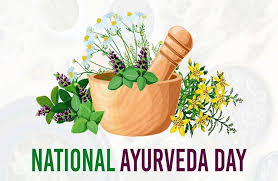
- 18 May 2025
In News:
The Government of India has officially fixed September 23 as Ayurveda Day, replacing the earlier practice of celebrating it on Dhanteras, which follows a variable lunar calendar. This change, notified through a Gazette notification in March 2025, aims to bring uniformity and global visibility to Ayurveda observance.
About Ayurveda Day:
- Purpose:Ayurveda Day is observed to honour India’s ancient medicinal heritage and promote Ayurveda as a scientific, evidence-based, and holistic healthcare system rooted in preventive and sustainable wellness practices.
- New Fixed Date:Starting 2025, Ayurveda Day will be celebrated every year on 23rd September, coinciding with the autumnal equinox, a day when day and night are nearly equal, symbolizing balance—a core concept in Ayurvedic philosophy.
- Why the Shift?The previous observance on Dhanteras created logistical challenges due to its annual date fluctuation (between mid-October and mid-November). The new fixed date allows for better planning and consistent global celebrations.
- Symbolism of Autumnal Equinox:The equinox represents cosmic balance and harmony, aligning with Ayurveda’s emphasis on equilibrium between mind, body, spirit, and environment.
Ayurveda: Key Facts for UPSC
- Definition:Ayurveda, meaning the “Science of Life” (from Sanskrit Ayu = life, Veda = knowledge), is a traditional Indian medical system dating back over 5,000 years, with roots in the Atharva Veda.
- Core Principles:
- SwasthasyaSwasthyaRakshanam: Maintaining the health of the healthy
- AturasyaVikaraPrashamanam: Treating diseases in the sick
- Emphasis on natural healing, diet, seasonal routines, and mind-body balance
- Key Features:
- Focus on preventive healthcare
- Use of herbal medicines, detox therapies, yoga, and meditation
- Personalised treatment based on individual constitution (Prakriti)
Significance for Global Health:
The Ministry of AYUSH envisions Ayurveda Day as a global platform to promote India’s traditional knowledge system as a part of the international wellness movement. Health professionals, researchers, academic institutions, and global partners are encouraged to participate in its observance to integrate Ayurveda into broader healthcare dialogues.
Operation Black Forest
- 18 May 2025
In News:
One of India’s most extensive anti-Naxal offensives in recent years, Operation Black Forest, resulted in the elimination of 31 Maoists. The operation was conducted in the Kurraguttalu Hills, a strategic Maoist stronghold located on the Chhattisgarh–Telangana border.
Key Features of Operation Black Forest
- Type: High-intensity counterinsurgency operation
- Duration: 21 days
- Area of Operation:Kurraguttalu Hills (approx. 1,200 sq km), known for rugged terrain and dense forest cover
Objectives:
- Dismantle key Maoist bases and operational infrastructure
- Neutralize senior Maoist leadership
- Re-establish state control in insurgency-affected zones
- Contribute to the national target of eliminating Left Wing Extremism (LWE) by March 31, 2026
Security Forces Involved:
- Central Reserve Police Force (CRPF)
- CoBRA (Commando Battalion for Resolute Action) units
- Chhattisgarh Police, including:
- Special Task Force (STF)
- District Reserve Guard (DRG)
About Kurraguttalu (Karregutta) Hills
- Geographical Location: On the inter-state border of BhadradriKothagudem district (Telangana) and Sukma district (Chhattisgarh)
- Terrain Characteristics:
- Extends over 25–50 km
- Features include steep elevations (~5,000 feet), caves, waterfalls, and dense forest cover
- Topography ideal for guerrilla warfare and concealment
- Local Terminology: Referred to by tribal communities as “Black Hills” or “Carregutta”
Demographic & Socio-political Aspects:
- Inhabited by Koya, Gond, and Chenchu tribes
- Tribal communities have historically been vulnerable in the conflict zone, often caught between insurgents and state forces
Other Key Maoist-affected Regions
- Abujhmad (Chhattisgarh)
- Malkangiri (Odisha)
- Gadchiroli (Maharashtra)
These areas, like Karregutta, serve as critical Maoist corridors with difficult terrain and limited state presence, posing ongoing challenges to internal security operations.
India’s First Geothermal Production Well in Northeast
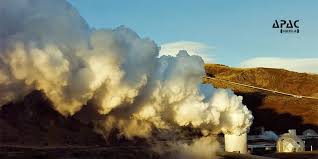
- 18 May 2025
In News:
In a significant advancement for clean energy in Northeast India, Dirang in Arunachal Pradesh has become the site of the region’s first operational geothermal production well. This marks a pivotal step in utilizing Earth’s internal heat for sustainable energy generation in the eastern Himalayas.
Project Details
- Location:Dirang, West Kameng district, Arunachal Pradesh
- Terrain: Eastern Himalayan region
Technology Used
- The project employs a closed-loop binary Organic Rankine Cycle (ORC) system, which captures subsurface geothermal heat for applications such as:
- Electricity generation
- Space heating
- Agricultural processing
- Reservoir Temperature: Approx. 115°C — optimal for direct-use geothermal systems.
- Drilling Approach: Low-impact precision drilling aimed at fault zones between quartzite and schist rock formations.
Institutional Collaboration
- Implementing Agency:Centre for Earth Sciences and Himalayan Studies (CESHS), Itanagar
- Supported by:
- Ministry of Earth Sciences, Government of India
- Government of Arunachal Pradesh
- International partners from Norway, Iceland, and Guwahati research institutes
Significance
- First-of-its-kind in the entire Northeast region
- Potential to make Dirang energy self-reliant through clean geothermal power
- Helps replace diesel and firewood in cold climates, reducing emissions
- Can enhance agricultural productivity and living standards in high-altitude areas
- Strengthens India’s geothermal potential (~10,600 MW), offering reliable base-load renewable energy unlike solar or wind
Stagflation and Banking Sector Risks in the U.S.

- 18 May 2025
In News:
In 2025, economic analysts are raising alarms over growing signs of stagflation in the United States and its potential to trigger a renewed banking crisis similar to the collapse of Silicon Valley Bank (SVB) in 2023.
Unrealized Losses in U.S. Banks
As of early 2025, U.S. banks are grappling with $482.4 billion in unrealized losses from securities investments, according to the Federal Deposit Insurance Corporation (FDIC). This marks a 32.5% rise from the previous quarter. The figure is approaching the $515 billion mark observed during the SVB crisis and could rise to $600–700 billion if interest rates hit 5%.
These losses are primarily linked to long-term securities like government bonds, whose prices have fallen due to rising benchmark 10-year Treasury yields, now exceeding 4.5%.
What is Stagflation?
Stagflation is a rare and difficult economic condition marked by:
- High inflation
- Stagnant or negative economic growth
- High unemployment
It complicates policymaking because:
- Tightening monetary policy (raising interest rates) to control inflation can worsen unemployment and slow growth.
- Loosening policy to boost growth can further fuel inflation.
Causes of Stagflation in 2025:
- Supply Shocks – Rising input costs (e.g., energy or tariffs).
- Tariff Hikes – New U.S. tariffs on imports have raised production costs.
- Policy Missteps – Uncoordinated fiscal and monetary measures.
Impacts on the Financial Sector
- Reduced Bond Values: High interest rates lower the market value of banks’ bond holdings.
- Risk of Bank Runs: Diminished asset values can trigger depositor panic.
- Credit Losses: Particularly in sectors like tech and venture capital where firms have weak earnings and poor debt coverage.
- Liquidity Crisis: A sudden negative news cycle could lead to another SVB-like collapse.
Experts warn that continued high interest rates could deepen banking stress and prolonged stagflation could amplify credit defaults.
India’s Agri-Export Regime
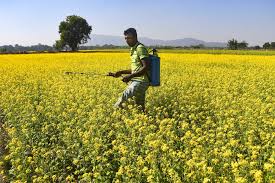
- 17 May 2025
In News:
India has recently inked free trade agreements (FTAs) with the United Kingdom, a trade and economic partnership agreement with the EFTA bloc, and concluded terms of reference for an India-US trade agreement. It is also negotiating with the European Union. In short, India is racing to plug itself into shifting global supply chains. Yet amid all the flashbulbs and photo?ops, India’s agriculture sector remains conspicuously absent.
Definition:
India’s agricultural export regime comprises the policies, institutions, and infrastructure that regulate and promote the export of farm produce.
Present Status:
- In 2023–24, India’s agricultural exports declined to $48 billion, down from $52 billion in 2022–23.
- Basmati rice accounts for approximately 21% of the total agri-export value.
- Bodies such as APEDA and branding tools like ODOP-GI tags play a role in market promotion.
- Agricultural products have been kept largely outside recent FTAs due to concerns over food security, rural employment, and political sensitivity.
Key Challenges in India’s Agri-Export Ecosystem
- Limited FTA Coverage:Agriculture is often excluded or granted extended transition periods in trade agreements, limiting access to foreign markets.
- High Rejection Rates:Several Indian agri-products face export rejections due to non-compliance with Sanitary and Phytosanitary (SPS) norms and pesticide residue limits (e.g., mangoes, groundnuts).
- Governance Gaps:With agriculture under the State List and trade under the Union List, there is often a disconnect in policy coordination, affecting timely decisions.
- Lack of Value Addition:A significant share of exports is in the form of raw produce, with insufficient emphasis on processed or brandedagri-goods.
- Infrastructure Deficits:Inadequate cold storage, pre-cooling facilities, and container depots—particularly in landlocked states like Uttar Pradesh and Madhya Pradesh—hinder export readiness.
- Subsidy Distortions:Input subsidies on power, water, and fertilizers disincentivize farmers from diversifying to export-oriented, high-value crops.
Strategic Roadmap for Agri-Export Growth
- Boost Value Addition:
- Establish agro-processing zones near APMCs.
- Incentivize processed exports through output-linked schemes.
- Strengthen Policy Coordination:Form a National Agri Trade Council involving the Centre, States, APEDA, FSSAI, and industry stakeholders to harmonize regulations and streamline decision-making.
- Reform Subsidy Framework:Transition to Direct Benefit Transfers (DBT) instead of input-based subsidies to encourage crop diversification and resource efficiency.
- Leverage Agri-Tech Solutions:Expand use of AI tools for crop health monitoring, promote vernacular advisories, and enhance access to real-time market data.
- Upgrade Infrastructure:
- Deploy GIS-based mapping for tracking surplus zones and export potential.
- Develop pre-cooling chains, inland ports, and container hubs in the hinterlands.
- Improve Connectivity in Interior States:Focus on building logistics networks in non-coastal states like UP and MP to integrate them with export supply chains.
Tsarap Chu Conservation Reserve
- 17 May 2025
In News:
Recently, the Himachal Pradesh Government notified the Tsarap Chu Conservation Reserve, making it India’s largest conservation reserve, spanning 1,585 sq km. It is located in the Spiti Valley of Lahaul-Spiti district, a high-altitude, cold desert ecosystem.
Legal Status:
- Declared under Section 36A(1) of the Wildlife (Protection) Act, 1972
- It is Himachal Pradesh’s fifth conservation reserve after Darlaghat, Naina Devi, Potter Hill, and Shilli
Geographical Significance:
- Boundaries:
- North: Union Territory of Ladakh
- East: Kibber Wildlife Sanctuary (up to Malang Nala and LungarLungpa)
- South: KabjimaNala
- West: Chandratal Wildlife Sanctuary
- Encompasses the confluence of Unam River and CharapNala
- Serves as the catchment area of Charap Nallah and a critical wildlife corridor linking Kibber and Chandratal sanctuaries
Ecological Importance:
- Identified as a high-density snow leopard habitat
- Other key species:
- Tibetan wolf, bharal (blue sheep), Himalayan ibex
- Kiang (Tibetan wild ass), Tibetan argali
- Rich in avian biodiversity: Rose Finch, Tibetan Raven, Yellow-billed Chough
Management and Community Involvement:
- To be managed by a Conservation Reserve Management Committee including local Panchayat representatives
- Emphasizes community-based conservation, balancing ecological goals with local livelihoods
- Promotes eco-tourism, wildlife research, and nature-based livelihood opportunities
Chenchu Tribe and Indiramma Housing Scheme
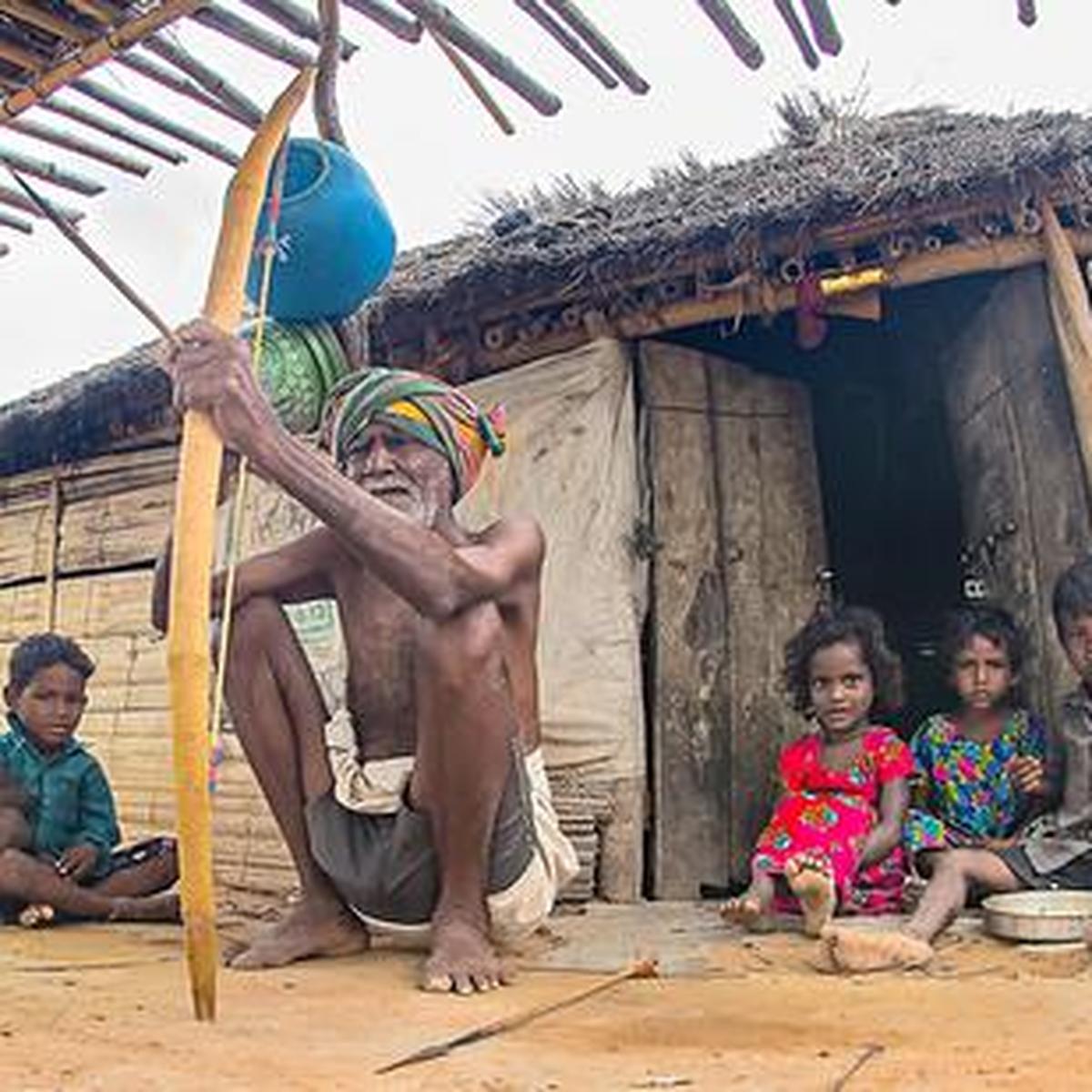
- 17 May 2025
In News:
In May 2025, the Telangana government announced the sanctioning of 10,000 Indiramma houses to Chenchu tribal families under a saturation approach in four Integrated Tribal Development Agencies (ITDA)—Utnur, Bhadrachalam, Munnanur, and EturuNagaram. An additional 700 units per ST assembly constituency have also been approved within these ITDA areas.This move aligns with the state’s commitment to improving housing infrastructure in tribal areas.
About Chenchu Tribe
Classification:
- Particularly Vulnerable Tribal Group (PVTG) in Andhra Pradesh
- Also found in Telangana, Karnataka, and Odisha
Habitat:
- Primarily inhabit the Nallamalai forests (Eastern Ghats)
- Chenchu settlements are called “Penta”, consisting of kin-based scattered huts
Language:
- Native Chenchu language (Dravidian family)
- Many also speak Telugu
Social Structure:
- Small conjugal families with gender equality
- Village elder, known as “Peddamanishi”, serves as the community authority
Livelihood:
- Forest-based subsistence lifestyle
- Depend on collection of non-timber forest produce (NTFPs) such as:
- Roots, tubers, fruits, beedi leaves, honey, gum, mohua flowers, tamarind
- Some serve as forest laborers, but mostly rely on traditional hunting and gathering
Religion & Culture:
- Worship local deities; blend of indigenous and Hindu practices
- Hold deep spiritual ties with the Srisailam Temple (dedicated to Lord Shiva and Devi Brahmaramba), which lies at the heart of their region
- Chenchus enjoy customary privileges at the Srisailam shrine
Dr. Ajay Kumar appointed as UPSC Chairman
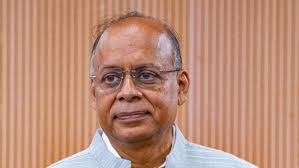
- 17 May 2025
In News:
Dr. Ajay Kumar, former Defence Secretary and a 1985-batch IAS officer of Kerala cadre, took oath as the new Chairman of the Union Public Service Commission (UPSC) on May 2025. The oath was administered by Lt. Gen. Raj Shukla, the senior-most member of the Commission, following the end of Preeti Sudan’s tenure on April 29, 2025.
Profile of Dr. Ajay Kumar:
- Academic Qualifications:
- B.Tech in Electrical Engineering – IIT Kanpur
- M.Sc. in Applied Economics – University of Minnesota, USA
- Ph.D. in Business Administration – Carlson School of Management, USA
- Key Positions Held:
- Managing Director, IT Department, Government of Kerala
- Secretary, Defence Production
- Director General, National Informatics Centre
- Secretary, Ministry of Defence
- E-Governance Contributions:
- Initiated digital platforms like Jeevan Pramaan, MyGov, PRAGATI, and Cloud First Policy
- Introduced biometric attendance systems and digital OPD registrations in AIIMS
He brings over 35 years of administrative experience in both state and central governments and has several publications in reputed journals.
Union Public Service Commission (UPSC) – At a Glance
Constitutional Backing:
- Established under Articles 315–323 of the Constitution
- Originally formed: October 1, 1926
- Became a constitutional body on January 26, 1950
Composition:
- Comprises a Chairman and other members, appointed by the President
- At least half the members must have held government office for 10+ years
- Presently, the Commission has vacancies for 2 members
Tenure:Chairman/Members hold office for 6 years or until 65 years of age, whichever is earlier
Resignation & Removal:
- Can resign by writing to the President
- Can be removed for misbehavior, only after an inquiry by the Supreme Court
Post-Tenure Restrictions:
- Chairman: Not eligible for any further government employment
- Members: Can be appointed as Chairman of UPSC or State PSC, but not to any other office of profit
Functions of UPSC:
- Central recruitment agency for:
- Civil Services Examination (CSE)
- Engineering Services (ESE)
- Combined Medical Services (CMS), and more
- Advises the government on:Recruitment rules, appointments, promotions, and disciplinary matters
Sakurajima Volcano Eruption
- 17 May 2025
In News:
Japan’s Sakurajima volcano, located in Kagoshima Prefecture on the southern island of Kyushu, recently erupted sending a dense ash plume 3,000 metres into the sky. The eruption originated from the Minamidake summit crater and was accompanied by a Level 3 volcanic alert, advising people to stay away from the vicinity.
Key Features of Sakurajima Volcano:
- Type: Stratovolcano (composite volcano)
- Geological Setting: Situated on a convergent plate boundary, formed from subduction-related volcanic activity.
- Structure: Comprises North Peak and South Peak, and lies on the southwestern rim of the Aira Caldera.
- Historical Significance: Was an island until the 1914 eruption, which connected it to the ?sumi Peninsula.
- Frequent Activity: One of Japan's most active volcanoes, experiencing daily minor eruptions and emitting continuous volcanic smoke.
Volcanic Characteristics:
- Lava Type:Andesitic – high in gas content and viscosity, leading to explosive eruptions.
- Hazards: Produces ash fall, pyroclastic flows, volcanic bombs, and toxic gases.
- Proximity to Populated Areas: Only 4 km from Kagoshima City, making it a high-risk volcano with strict monitoring by the Japan Meteorological Agency (JMA).
Impact and Preparedness:
- No injuries or major damages have been reported as of now.
- Ash fall warnings were issued for Kagoshima, Kumamoto, and Miyazaki prefectures.
- The eruption highlights Japan’s robust disaster preparedness and early warning systems, essential due to the country's location on the Pacific Ring of Fire.
Operation Keller
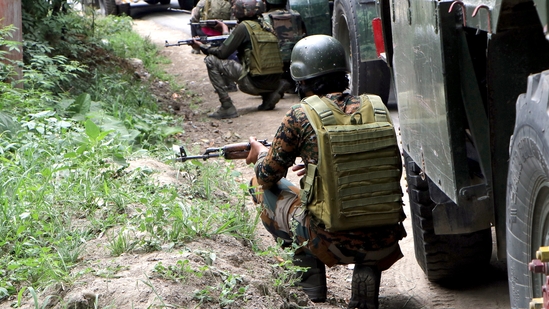
- 16 May 2025
In News:
On 13 May 2025, the Indian Army, in coordination with the J&K Police and CRPF, launched Operation Keller, a targeted counter-terrorism operation in the Keller forests of Shopian district, Jammu & Kashmir. The operation led to the elimination of three terrorists, including Shahid Kuttay, the chief of The Resistance Front (TRF) and the alleged mastermind behind the Pahalgam terror attack.
Key Objectives:
- Neutralise terrorists affiliated with The Resistance Front (TRF), a proxy of Lashkar-e-Taiba (LeT).
- Specifically eliminate Shahid Kuttay, involved in the April 2025 Pahalgam attack that killed 26 civilians.
- Secure volatile forested zones in South Kashmir to prevent future infiltrations and retaliatory threats.
Details of the Operation:
- Launch Date: 13 May 2025
- Location:Shoekal Keller forest area, Shopian district, J&K
- Conducted By: Indian Army (Rashtriya Rifles), J&K Police, CRPF
- Method: Intelligence-based search and destroy mission
- Outcome: Elimination of three hardcore terrorists after a fierce gunfight; operation ongoing.
Pahalgam Terror Attack Link:
- Posters announcing ?20 lakh bounty per terrorist involved in the Pahalgam killings were circulated in Pulwama.
- J&K Police released sketches identifying the three LeT-linked terrorists responsible.
- Operation Keller targeted the network allegedly behind this attack.
About Shopian District:
- Location: Southern Kashmir Valley; bordered by Pulwama, Anantnag, Kulgam, and PirPanjal mountains.
- Elevation: ~2,146 metres; experiences harsh winters (up to −7°C).
- Economy: Agriculture-based, especially apple orchards.
- History:
- Upgraded to district status in 2007 (earlier part of Pulwama).
- Lies along the historic Mughal Road connecting Lahore and Srinagar.
- Name Origin: Possibly from “Shah-payan” (royal stay) or “Shin-van” (snow forest).
Extended Fund Facility (EFF)
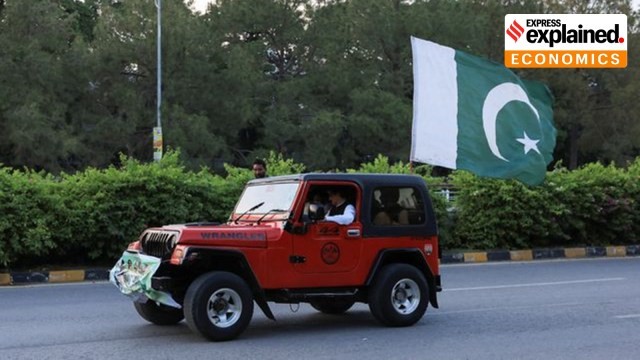
- 16 May 2025
In News:
Recently, the IMF Executive Board approved a $1 billion disbursement to Pakistan under the Extended Fund Facility (EFF). This brings total disbursements under the current EFF arrangement to $2.1 billion out of a total planned support of $7 billion.
What is the Extended Fund Facility (EFF)?
- Governed by: International Monetary Fund (IMF), part of the Bretton Woods Institutions.
- Purpose: To support countries facing medium-term balance of payments problems caused by structural economic weaknesses.
- Nature of Support:Loan (not a grant or aid), with extended repayment periods.
- Tenure: Typically spans over three or more years, with phased disbursements.
- Objective: Enables countries to implement structural reforms such as:
- Broadening the tax base
- Strengthening financial institutions
- Reducing fiscal deficits
- Managing inflation
Eligibility for EFF:
To qualify, countries must:
- Exhibit persistent balance of payments stress
- Have deep-rooted economic weaknesses (e.g., poor governance, low investment, weak tax systems)
- Show a willingness to undertake IMF-monitored reforms
Pakistan’s Economic Situation:
- Stagnant GDP: Estimated at $338 billion in 2023, lower than in 2017.
- High Inflation: Averaging over 20% between 2020–2024.
- Frequent Borrowing: Pakistan has received 28 IMF loans in 35 years, and also borrows from:
- China
- UAE and Saudi Arabia
- ADB, IDB, Paris Club, Nordic Development Fund
Key Challenges:
- Economic mismanagement
- Low savings and investment
- Infrastructure gaps
- Low female workforce participation
- High population growth
Why Did IMF Approve the 2025 Tranche?
The IMF approved the tranche based on positive macroeconomic developments:
- Reduced inflation: Down to 0.3% in April 2025
- Improved forex reserves
- Fiscal reforms: Implementation of the FY2025 budget and Agricultural Income Tax
- Credible reform measures: IMF noted Pakistan’s “significant progress” in restoring economic stability.
Golden Dragon 2025
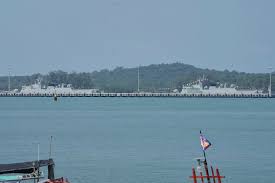
- 16 May 2025
In News:
In May 2025, Cambodia and China launched their largest-ever edition of the annual Golden Dragon military exercise, featuring coordinated land, sea, and air operations. This drill underscores deepening military and strategic cooperation between the two countries amidst shifting geopolitical alignments in Southeast Asia.
About Golden Dragon Exercise:
- Inception: Initiated in 2016, Golden Dragon is a bilateral military exercise between China and Cambodia.
- Objective: Strengthens defence ties, capacity building, and joint operational readiness.
- 2025 Theme: Focuses on joint counter-terrorism operations and humanitarian relief efforts, projecting it as a peace-oriented and technologically advanced drill.
Key Highlights
- Venue: Conducted at Ream Naval Base, located on Cambodia’s southern coast near Sihanoukville.
- Military Domains: Involves exercises across land, sea, and air.
- Technological Showcase:
- Reconnaissance and attack drones
- Surgical robots
- Robot dogs
- These technologies highlight an evolution toward AI-driven and robotic warfare capabilities.
Strategic and Geopolitical Significance:
- Ream Naval Base Expansion:
- China has funded upgrades to this naval base, raising concerns about possible dual-use military capabilities and Beijing's expanding naval footprint in the Gulf of Thailand.
- Cambodia denies hosting any exclusive foreign military presence but allows docking of ships from friendly nations, including recent arrivals from Japan, Vietnam, and China.
- China-Cambodia Relations:
- Cambodia is considered China’s closest ally in Southeast Asia.
- China is a major economic and military benefactor, with growing influence in Cambodian infrastructure and defence.
- Counterbalance to U.S. Influence:
- The drill coincides with the U.S.-led Balikatan exercise, which includes forces from the U.S., Philippines, Australia, and Japan.
- Reflects the strategic competition between China and the U.S. in the Indo-Pacific region.
- “String of Pearls” Strategy:
- China’s involvement in ports like Ream (Cambodia), Hambantota (Sri Lanka), and Gwadar (Pakistan) reflects its strategy to establish logistical and strategic outposts across the Indian Ocean Region (IOR).
India assembles first Chromosome-Level Genome of the Yak
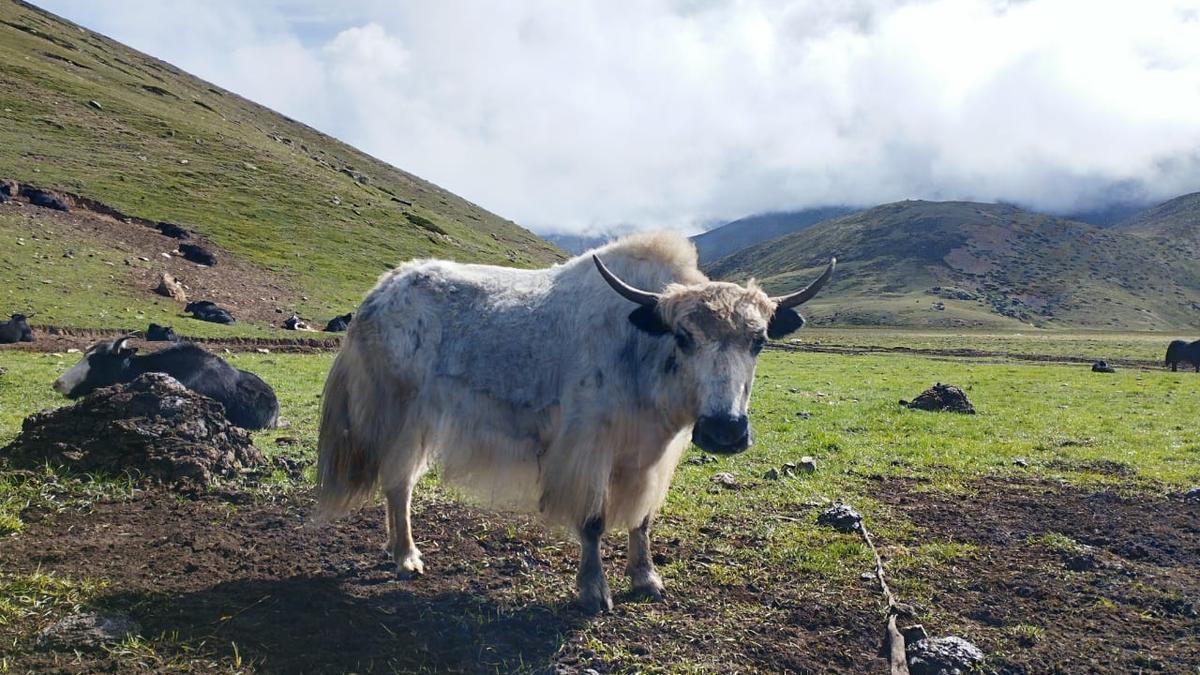
- 16 May 2025
In News:
India has achieved a significant breakthrough in livestock genomics with the successful assembly of the first-ever chromosome-level genome of the Indian yak (Bos grunniens). The initiative was led by the Indian Council of Agricultural Research (ICAR) through collaboration among four of its premier institutes.
Key Institutions Involved:
- ICAR-National Research Centre on Yak (NRC-Yak), Dirang, Arunachal Pradesh
- ICAR-Indian Institute of Agricultural Biotechnology (IIAB), Ranchi
- ICAR-Central Institute for Research on Cattle (CIRC), Meerut
- ICAR-Central Institute for Research on Cattle (CIRC), Nagpur
Importance of the Indian Yak:
- Known as the “Ship of the Himalayas,” the domestic yak is crucial to the livelihoods of high-altitude pastoral communities.
- Provides meat, milk, fibre, dung for fuel, and is used for transport in rugged terrain.
- Found at elevations above 7,000 feet in regions like Ladakh, Sikkim, Himachal Pradesh, Arunachal Pradesh, and Jammu & Kashmir.
- Exhibits extraordinary cold tolerance, making it a valuable model for studying climate adaptation.
Scientific Achievement:
- Researchers used long-read sequencing technology and advanced bioinformatics tools to develop a chromosome-level genome assembly.
- This allows precise gene mapping, facilitating identification of genes related to:
- Cold tolerance
- Disease resistance
- Milk and meat quality
- Reproductive traits
Benefits and Applications:
- Conservation: Helps counter threats like genetic erosion, climate change, and loss of grazing lands.
- Livestock Improvement: Enables targeted breeding programs for improved productivity and adaptability.
- Scientific Research: Offers comparative insights into bovine genetics and facilitates allele mining for key traits.
- Sustainable Development: Aids in the socio-economic upliftment of yak herders by improving livestock performance.
About ICAR-NRC on Yak:
- Established in 1989, located in Dirang, Arunachal Pradesh.
- Premier institution for research on yak husbandry, health, nutrition, and genetics.
- Works to preserve the unique genetic resources of Himalayan livestock.
Desalination Technology
- 16 May 2025
The Defence Research & Development Organisation (DRDO), under the Aatmanirbhar Bharat initiative, has successfully developed a high-pressure, nanoporous, multilayered polymeric membrane for seawater desalination.
Developing Agency:
- The technology was developed by the Defence Materials Stores Research & Development Establishment (DMSRDE), Kanpur, a DRDO laboratory.
- It addresses the Indian Coast Guard's (ICG) operational needs aboard Offshore Patrol Vessels (OPVs), especially to counter instability caused by chloride ions in saline water.
Salient Features of the Technology:
- Indigenous development completed in a record time of 8 months.
- Successfully tested in existing desalination plants aboard ICG vessels.
- Undergoing 500-hour operational testing before final clearance by ICG.
- Can be adapted for use in coastal areas for civilian desalination purposes as well.
Strategic Significance:
- Enhances onboard freshwater self-reliance for maritime security forces.
- Reduces dependency on imported technologies.
- Contributes to India’s self-reliance in critical defence and water technologies.
Desalination Technology: Key Concepts
What is Desalination?
Desalination is the process of removing dissolved salts and minerals from seawater or brackish water to produce potable or industrial-grade water.
Main Technologies Used:
- Reverse Osmosis (RO):
- Pressure-driven membrane filtration.
- Uses semi-permeable membranes to separate salts from water.
- Thermal Desalination:Involves evaporation followed by condensation to obtain fresh water.
Working of RO Desalination:
- In osmosis, water naturally moves from low solute to high solute concentration across a membrane.
- In reverse osmosis, external pressure is applied to force water from high solute (saline) to low solute (freshwater) side.
- RO membranes allow only water molecules to pass, filtering out salts and impurities.
- Seawater with ~35,000 ppm Total Dissolved Solids (TDS) is reduced to 200–500 ppm, making it drinkable.
Axions and the HAYSTAC Experiment
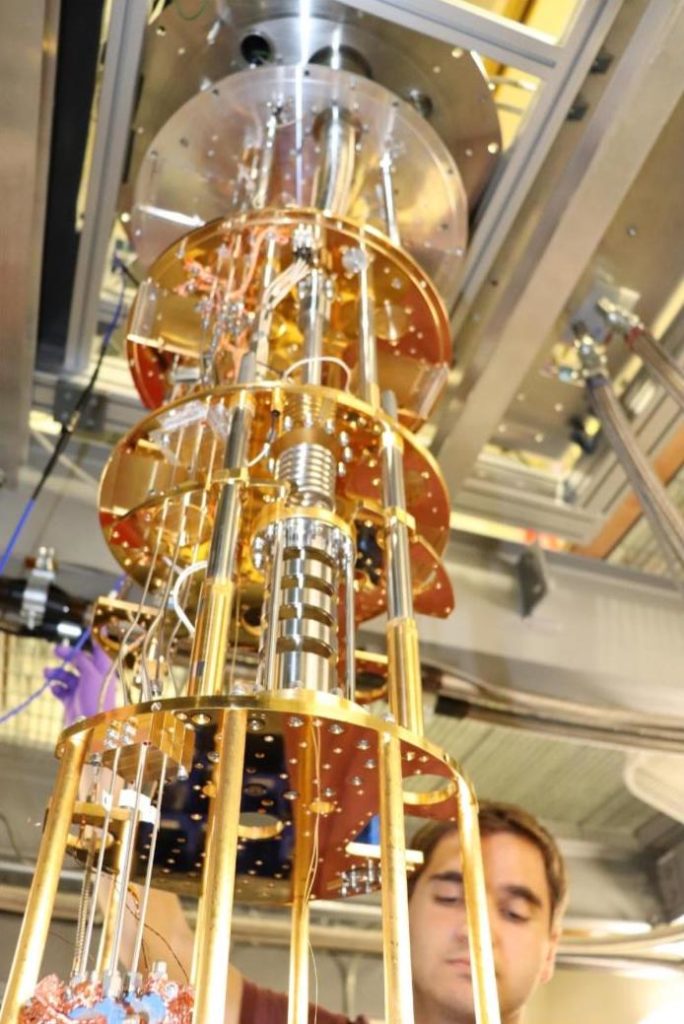
- 15 May 2025
In News:
A recent study published inPhysical Review Letters reports that while the HAYSTAC experiment did not detect axions, it achieved a major technological milestone. The experiment significantly broadened the search range for axion masses and their interaction strengths, marking substantial progress in the hunt for dark matter.
What are Axions?
Axions are theoretical subatomic particles proposed in the late 1970s as a solution to the strong CP (Charge-Parity) problem in quantum chromodynamics (QCD). This problem involves the puzzling absence of CP violation in strong nuclear interactions, contrary to expectations.
- Axions were introduced to dynamically neutralize CP-violating effects by adjusting the QCD theta (θ) parameter to nearly zero.
- Over time, they have also gained prominence as a leading candidate for dark matter, the elusive form of matter believed to make up the bulk of the universe’s mass.
Why Axions matter in Dark Matter Research
Axions are particularly attractive as Cold Dark Matter (CDM) candidates due to their theoretical and cosmological properties:
- Electromagnetically neutral
- Extremely low mass
- Very weak interactions with ordinary matter and radiation
Foundational work by physicists like Sikivie, Wilczek, Dine, and Preskill demonstrated that axions produced in the early universe could account for the observed dark matter density—roughly 85% of the universe's matter content.
The HAYSTAC Experiment: A Precision Tool for Axion Detection
HAYSTAC (Haloscope At Yale Sensitive To Axion Cold Dark Matter) is a collaborative project led by Yale, Berkeley, and Johns Hopkins University, designed to detect axions by converting them into detectable photons using a haloscope.
Key Features:
- Haloscope Design: A microwave cavity placed in a strong magnetic field, following a design originally proposed by Pierre Sikivie.
- Quantum Squeezing: HAYSTAC is one of the few experiments—alongside Advanced LIGO—that uses quantum squeezing to reduce quantum noise, thereby enhancing measurement precision.
What is Quantum Squeezing?
Quantum squeezing is a technique that manipulates quantum uncertainty to minimize noise in one variable while tolerating increased uncertainty in another. This helps:
- Suppress random fluctuations, and
- Improve the signal-to-noise ratio—vital for detecting rare, weak signals like those possibly produced by axions.
Phase II Highlights of HAYSTAC
- Conducted the widest frequency sweep to date in the axion mass range.
- Marked a technical breakthrough in detection sensitivity.
- Although axions were not detected, the results helped rule out certain mass-coupling combinations, narrowing the parameter space for future searches.
Crohn’s Disease
- 15 May 2025
In News:
A former SpaceX employee has filed a lawsuit against the company, alleging wrongful termination. According to the claim, the individual was fired due to frequent restroom visits linked to Crohn’s disease, a chronic medical condition. The case has drawn attention to the difficulties faced by individuals managing long-term illnesses in demanding work environments.
Key Details:
Crohn’s disease is a type of inflammatory bowel disease (IBD) that causes chronic inflammation of the digestive tract. It is a lifelong condition that can significantly impact quality of life and daily functioning.
Key Features:
- Nature of the Disease:A persistent and often progressive condition marked by inflammation in different sections of the digestive tract, most frequently affecting the end of the small intestine (ileum) and the beginning of the large intestine (colon).
- Extent of Inflammation:Inflammation may penetrate deep into the bowel wall, leading to pain, damage, and complications over time.
- Common Symptoms:
- Persistent diarrhea
- Abdominal pain and cramping
- Weight loss
- Fatigue and sometimes malnutrition
Symptoms can vary in severity and may appear intermittently, often referred to as “flare-ups.”
Complications and Impact
Crohn’s disease can be debilitating and may result in serious complications, including:
- Intestinal blockages
- Fistulas (abnormal connections between body parts)
- Abscesses
- Nutritional deficiencies
Treatment and Management
- No Cure Available:While there is currently no cure for Crohn’s disease, medical therapies can effectively manage symptoms and inflammation.
- Goals of Treatment:
- Inducing and maintaining remission
- Healing affected intestinal tissues
- Improving overall quality of life
- Treatment Approaches:
- Anti-inflammatory medications
- Immune system suppressors
- Dietary changes
- In severe cases, surgery may be required
Many individuals with Crohn’s can lead productive lives with appropriate treatment and support.
Indian Grey Wolf
- 15 May 2025
In News:
The Indian grey wolf, a keystone predator crucial to maintaining the ecological balance of India’s grasslands, is facing a sharp population decline. The primary threat stems from increasing encounters with feral (free-ranging) dogs, which pose risks of disease transmission, competition, and hybridization.
Profile:
- Scientific Classification:A subspecies of the grey wolf (Canis lupus), native to the Indian subcontinent and parts of Southwest Asia.
- Habitat:Inhabits scrublands, semi-arid grasslands, and pastoral agro-ecosystems, often overlapping with human-dominated landscapes.
- Physical Traits:Intermediate in size between the Tibetan and Arabian wolves, the Indian grey wolf is adapted to warmer climates and lacks the dense winter coat of its colder-climate relatives.
- Behavioral Characteristics:
- Primarily nocturnal
- Hunts in small packs
- Less vocal than other wolf subspecies
- Geographical Range:Extends from Israel in the west to the Indian subcontinent in the east.
Legal and Conservation Status
- IUCN Red List:Least Concern globally, but considered locally endangered in India due to habitat loss and increasing threats.
- CITES Listing:Appendix I – Species facing extinction, with trade subject to strict regulation.
- Wildlife (Protection) Act, 1972: Listed under Schedule I, ensuring maximum legal protection within India.
Conservation Dilemma: Feral Dogs
- The Maharashtra Forest Rules, 2014 permit the removal of non-wild species, like dogs, from protected forest areas if they pose a threat to native wildlife.
- Despite this provision, forest officials often refrain from culling dogs due to ethical and animal rights concerns.
- Vaccination programs are proposed as alternatives to mitigate disease risks like canine distemper virus (CDV), but implementation remains logistically challenging.
Key Threats
- Disease Transmission: Feral dogs carry zoonotic diseases such as CDV, which can infect and decimate wolf populations.
- Hybridization: Interbreeding with dogs leads to genetic dilution, threatening the purity and survival of the species.
- Competition: Feral dogs compete with wolves for food and territory.
Case Study: Kadbanwadi Grassland, Maharashtra
- Location: Situated in Indapur tehsil, Pune district, this grassland spans over 2,000 hectares.
- Biodiversity Hotspot: Home to species like the Bengal fox, striped hyena, Brahminy kite, and the Indian grey wolf.
- Cultural Coexistence: The local shepherd communities have shared a mutually respectful relationship with wolves over generations, reflecting a model of harmonious coexistence.
JenuKuruba Tribe
- 15 May 2025
In News:
In a significant move, families from the JenuKuruba tribe have begun returning to their ancestral lands located within Nagarhole National Park. This reoccupation marks an important step in their decades-long struggle to reclaim traditional forest habitats.
Who are the JenuKurubas?
The JenuKuruba are an indigenous tribal community classified as a Particularly Vulnerable Tribal Group (PVTG) in India. They are primarily concentrated in the Kodagu and Mysuru districts of Karnataka.
- Etymology:The term "JenuKuruba" derives from Kannada—“jenu” means honey, reflecting their age-old practice of honey collection. Traditionally, they depend on forest produce, minor agriculture, and gathering activities for their livelihood.
- Alternate Names:They are also known as Then Kurumba or KattuNaikar in various local contexts.
Settlement and Lifestyle
- Habitat:The community resides in compact settlements known as “Hadi.”
- Living Style:They follow a semi-nomadic lifestyle, shaped by their deep relationship with forest ecosystems rather than external authorities like the state, police, or religious institutions.
Community Structure
- Governance:
The JenuKurubas follow a traditional leadership hierarchy that includes:- Yajamana (Headman) – responsible for social matters
- Gudda (Ritual Head) – oversees religious ceremonies
While the Gudda handles spiritual issues, all other community functions are managed locally under the guidance of the Yajamana.
Belief System and Culture
- Spiritual Beliefs:Their religion is rooted in the worship of supernatural spirits and deities unique to their tradition. These spiritual entities have distinct identities and are central to their worldview.
- Cultural Expressions:Music, dance, and oral storytelling are vital cultural practices. Their traditional songs and dances revolve around themes of agriculture, marriage, mythology, and faith.
Significance of the return to Nagarhole
The recent return of JenuKuruba families to Nagarhole represents not just a physical homecoming, but a cultural revival. For the tribe, the forest is not just a resource—it is sacred ground tied to their identity, heritage, and spiritual life.
Their reoccupation reopens long-standing debates about conservation, indigenous rights, and forest governance in India.
Piprahwa Gems Controversy
- 15 May 2025
In News:
A group of international Buddhist scholars and monastics has voiced strong objections to the proposed auction of the Piprahwa Gems. These jewels, long venerated as relics intimately linked to the historical Buddha, are at the center of a heated debate over their sale.
Background of the Piprahwa Gems
- Discovery Site: The gems were unearthed in 1898 at Piprahwa, in present-day Uttar Pradesh, where a stupa (Buddhist burial monument) once stood.
- Historical Significance: An inscription on one of the reliquaries claims the stupa housed the physical remains of the Buddha, who passed away circa 480 BCE.
- Excavation: The find was made by William Claxton Peppé, a British colonial engineer, during work on his estate. It marked the first scientifically credible recovery of Buddha’s relics in modern times.
Composition and Distribution
- Material Variety: The collection comprises roughly 1,800 pieces, including amethysts, coral, garnets, pearls, rock crystal, shells, and gold, fashioned into beads, pendants, and other ornaments, as well as unworked specimens.
- Custodial History: Under the 1878 Indian Treasure Trove Act, the British Crown claimed the entire hoard. Most of these gems were subsequently transferred to the Indian Museum in Kolkata. Peppé retained around one-fifth of the collection—items colonial officials deemed “duplicates”—which later entered private hands.
- International Gift: The British gifted the stupa’s bone and ash fragments to King Chulalongkorn of Siam (modern-day Thailand), further dispersing relics tied to the find.
Contemporary Concerns
Many in the Buddhist community argue that auctioning these gems violates their sacred status and severs the spiritual connection believers feel to the Buddha’s remains. They call for the jewels to remain in public or religious trust, rather than being treated as collectors’ items in the art market.
Geotubing
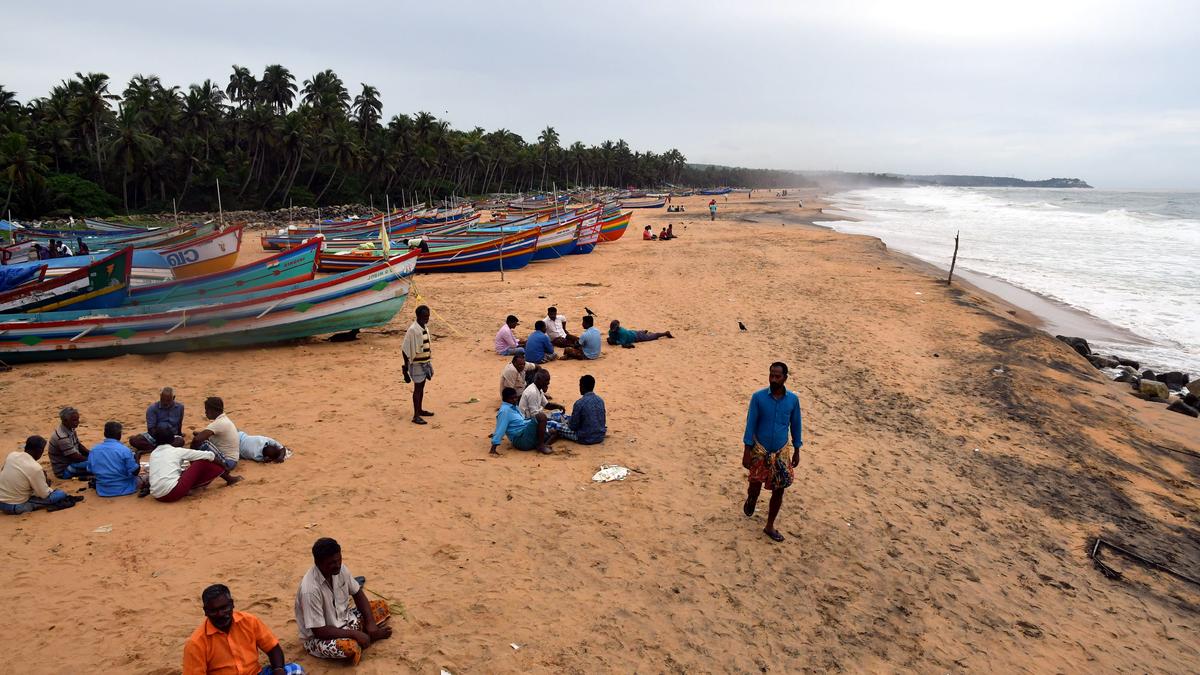
- 14 May 2025
In News:
A joint study conducted by the National Institute of Ocean Technology (NIOT) and the Kerala State Coastal Area Development Corporation (KSCADC) has confirmed the effectiveness of geotubing-based offshore breakwaters in managing coastal erosion at Poonthura, Kerala. The installation not only mitigated shoreline erosion but also contributed to sustainable beach formation—highlighting the method's potential for broader coastal protection strategies.
What is Geotubing?
Geotubing involves the use of large geotextile tubes, filled with sand or slurry, which are strategically placed underwater to reduce wave energy and prevent shoreline erosion. At Poonthura, three vertical layers of 15-meter circumference geotubes were installed perpendicular to the coast, forming submerged breakwaters that trap sediment and promote natural sand deposition.
Materials and Construction
- Geotubes Composition:Constructed from high-performance woven geotextiles, typically made of polypropylene (PP) or polyester (PET).
- Material Properties:These fabrics are designed to be permeable, durable, and resistant to UV radiation, chemical exposure, and microbial degradation, making them well-suited for long-term marine use.
Key Functional Features
- Wave Energy Dissipation:Submerged geotubes act as barriers that absorb and deflect wave energy before it reaches the shoreline.
- Beach Nourishment Support:By slowing wave action, the geotubes encourage natural sand accumulation, supporting beach regeneration.
Advantages of Geotubing
- High Durability:Withstands tensile stress and harsh environmental conditions, including chemical and biological exposure.
- Environmentally Friendly:Geotubing is non-toxic and contributes to coastal and wetland restoration without polluting ecosystems.
- Cost-Effective:More economical than traditional concrete or steel structures and easier to install, particularly in remote or variable terrains.
- Customizable Design:Geotubes can be tailored in size and configuration to suit specific project requirements and geographical conditions.
- Multi-Functional Utility:Beyond coastal defense, geotubes are effective in flood management, riverbank stabilization, sludge dewatering, and landfill containment.
Broader Applications of Geotubing
- Coastal Protection:Used in breakwaters, seawalls, and dune reinforcement projects.
- River and Lake Management:Effective for stabilizing riverbanks and controlling sedimentation.
- Wastewater Treatment:Applied in industrial and municipal dewatering processes.
- Infrastructure Support:Utilized in the construction of roads, railways, ports, and reservoirs.
- Environmental Remediation:Useful for site isolation, pollution control, and ecosystem restoration.
MY Bharat Portal
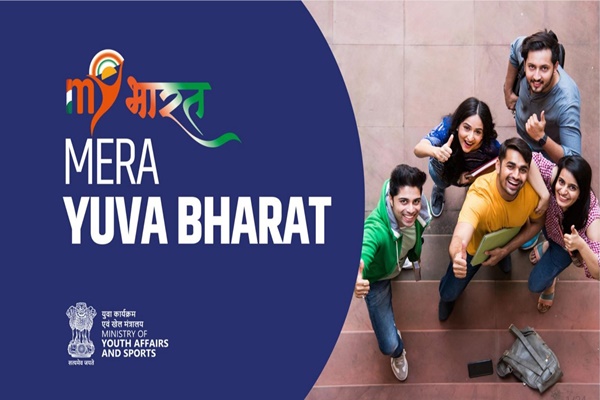
- 14 May 2025
In News:
During a recent address in Patna, the Union Minister called on India’s youth to actively engage with the ‘MeraYuva Bharat (MY Bharat)’ portal. Emphasizing the critical role of young people in shaping the nation’s future, he encouraged them to become active participants in developmental initiatives and contribute meaningfully to the country’s progress.
About MY Bharat Portal
What is MY Bharat?
Launched on October 31, 2023—the birth anniversary of Sardar Vallabhbhai Patel—MeraYuva Bharat (MY Bharat) is an autonomous institution under the Ministry of Youth Affairs and Sports. It serves as a technology-driven, institutional platform designed to empower youth and enable youth-led transformation across India.
Objectives of MY Bharat
- Promote inclusive and active youth participation in nation-building activities.
- Prepare young individuals to be agents of change during Amrit Kaal, aligning with the vision of Viksit Bharat@2047.
- Ensure equal access to opportunities for learning, volunteering, and mentorship.
Key Features of the Portal
- Volunteer Mobilisation:Enables youth to engage in public welfare initiatives, disaster relief operations, and awareness campaigns across various sectors.
- Digital Youth Profiles:Participants can create profiles to showcase their skills, interests, and experiences, helping them connect with relevant programs and organizations.
- Experiential Learning Opportunities:Facilitates hands-on project work with local governments, private enterprises, and NGOs, offering real-world exposure.
- Mentorship and Peer Networking:Provides structured access to experienced mentors and national peer networks, fostering guidance and collaboration.
- Government Scheme Awareness:Empowers youth to act as grassroots ambassadors, promoting awareness of various government schemes within their communities.
State of the World’s Nursing 2025
- 14 May 2025
In News:
The World Health Organization’s upcoming “State of the World’s Nursing 2025” report raises an urgent alarm over the deepening global nursing shortage. It projects that by 2030, 70% of the global shortfall will be concentrated in Africa and the Eastern Mediterranean regions, underscoring the need for immediate and strategic workforce interventions.
Nursing in India: Current Status and Challenges
India is grappling with a critical shortage of nursing professionals, falling short of global standards in several key areas:
- Nurse-to-Population Ratio:India currently has approximately 30 nurses per 10,000 people, which is below the WHO-recommended threshold of 44.5 health workers per 10,000.
- Nursing Education:While the country has significantly increased the number of nursing graduates, quality concerns, infrastructure limitations, and faculty shortages persist across institutions.
- Migration Trends:India remains one of the leading exporters of trained nurses, especially to countries like the UK, Gulf nations, and Australia, contributing to a domestic workforce drain.
- Workforce Retention:Persistent issues such as low wages, limited opportunities for career advancement, and unsafe or stressful working environments contribute to high attrition rates.
Key Issues in India's Nursing Sector
- Inadequate Workforce Availability:India does not meet the WHO’s benchmark for health worker density, with rural areas facing the most severe shortages.
- Urban-Rural Imbalance:A large concentration of nurses in urban private hospitals severely restricts healthcare access in Primary and Community Health Centres (PHCs and CHCs) in rural regions.
- Poor Working Conditions:Nurses frequently endure long working hours, delayed salaries, insufficient mental health support, and unsafe work environments, which discourage long-term retention.
- Lack of Leadership Representation:The absence of Chief Nursing Officers (CNOs) at both state and national levels weakens the profession’s influence in health policy and governance.
- Limited Public Investment:Constraints in fiscal capacity and inadequate infrastructure hinder both the training and employment of nursing professionals.
- International Migration Without Compensation:The high rate of nurse outmigration is not matched by equitable bilateral agreements, leaving India's healthcare system vulnerable and under-resourced.
Strategic Recommendations:
- Expand Training Infrastructure:Increase the number of nursing colleges with a focus on faculty recruitment and clinical infrastructure, in line with the National Education Policy’s emphasis on vocational education.
- Strengthen Leadership and Governance:Establish Chief Nursing Officers at state and national levels, and bolster the role of nursing councils to advocate for reforms and oversee standards.
- Enhance Retention Strategies:Improve remuneration, ensure workplace safety, offer mental health support, and create clear career progression pathways to retain talent.
- Promote Rural Deployment:Introduce bonded scholarships, financial incentives, and housing support to encourage nursing professionals to serve in underserved rural regions.
- Leverage Technology and AI:Incorporate blended learning models, train nurses in electronic health record systems, and integrate AI-driven modules into nursing curricula for future-ready skills.
- Foster Fair International Cooperation:Develop bilateral agreements (e.g., India–UK healthcare MoUs) that ensure reciprocal benefits and support domestic capacity-building when nurses migrate abroad.
Raika Tribe
- 14 May 2025
In News:
The Raika community's deep-rooted knowledge of pasture cycles, animal health, and biodiversity continues to play a vital role in sustaining the delicate ecological balance of Rajasthan’s arid regions.
Who are the Raikas?
The Raika tribe, also known as Rabaris, is an indigenous pastoralist community predominantly residing in the arid and semi-arid landscapes of Rajasthan, especially around Kumbhalgarh in Rajsamand district.
Their identity is intricately linked to camel herding, particularly the breeding of the hardy Marwari camel—a breed renowned for its strength, endurance, and adaptability to desert conditions.
Cultural and Ecological Significance
For the Raikas, camel herding is more than just a livelihood—it is a way of life. Their cultural practices, seasonal migrations, and oral traditions are closely tied to their pastoral role.
Over generations, they have cultivated extensive traditional knowledge about:
- Pasture Cycles: Insight into optimal grazing periods and routes to maintain vegetation health.
- Animal Health: Natural methods to ensure the well-being of livestock, particularly camels.
- Biodiversity Management: Sustainable herding practices that promote ecological resilience.
Their traditional migratory routes enable camels to graze on medicinal desert plants, which not only improve animal health but also contribute to preserving the region’s unique biodiversity and ecological stability.
PL-15 Missile
- 14 May 2025
In News:
Amid rising tensions between India and Pakistan, a fully intact Chinese-made PL-15 long-range air-to-air missile has reportedly been recovered in Hoshiarpur, Punjab. The incident has sparked security and strategic concerns, given the missile's advanced capabilities and origin.
Overview of the PL-15 Missile
Also known as the "Thunderbolt-15," the PL-15 is a cutting-edge beyond-visual-range air-to-air missile (BVRAAM) developed by China’s 607 Institute and produced by the China Aerospace Science and Industry Corporation (CASIC). It is specifically designed to engage enemy aircraft at extended distances, far beyond the visual range of the launching platform.
Key Features:
- Propulsion and Speed:The missile is powered by a dual-pulse solid-propellant rocket motor, enabling it to reach speeds of over Mach 5.
- Range Capabilities:The domestic Chinese version has an estimated operational range of 200 to 300 km. The export version, the PL-15E, is officially rated for a maximum range of 145 km, though in practice this may be limited to 100–120 km depending on the launch conditions and platform.
- Warhead:It carries a high-explosive fragmentation warhead weighing between 20 and 25 kg, engineered to effectively neutralize maneuvering aerial targets.
- Guidance System:The PL-15 is equipped with an advanced guidance package that includes:
- Inertial navigation
- Beidou satellite updates
- Two-way datalink for real-time mid-course adjustments
- Terminal active radar homing with an AESA (Active Electronically Scanned Array) radar seeker
NiveshakShivir
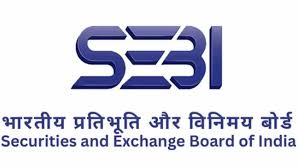
- 13 May 2025
In News:
In May 2025, the Investor Education and Protection Fund Authority (IEPFA), under the Ministry of Corporate Affairs, in collaboration with the Securities and Exchange Board of India (SEBI), convened a strategic preparatory meeting at SEBI’s Mumbai office to launch the “NiveshakShivir” initiative. This nationwide investor outreach program aims to facilitate the reclamation of unclaimed dividends and shares by investors across India.
Key Features of “NiveshakShivir”
- Investor Helpdesks: Physical helpdesks will be set up to enable investors to interact directly with company representatives and Registrars and Transfer Agents (RTAs) for end-to-end assistance in recovering unclaimed assets.
- Digital Search Facility: IEPFA provides an online portal (https://iepfa.gov.in/login) where shareholders can check if their shares have been transferred to the IEPF and file claims using Form IEPF-5.
- Streamlined Process: Clear guidance is provided for shareholders holding shares in dematerialized or physical form to verify and reclaim their unclaimed dividends and shares efficiently.
- Coverage: The initiative is set to launch first in Mumbai and Ahmedabad, with plans to expand to other cities with high volumes of unclaimed investor assets.
Actions for Shareholders
- Demat Shareholders: Are encouraged to directly contact respective companies for clarification regarding shares liable for transfer to IEPFA.
- Physical Shareholders: Should verify share status on the IEPFA website and claim refunds if shares have been transferred.
- The initiative reduces dependence on intermediaries and improves transparency and efficiency in the recovery process.
About the Investor Education and Protection Fund Authority (IEPFA)
- Legal Basis: Established under Section 125 of the Companies Act, 2013.
- Function: Operates under the Ministry of Corporate Affairs to protect investor interests, promote financial literacy, and manage the corpus of unclaimed dividends, matured deposits, and shares transferred by companies.
- Objective: To foster a transparent, investor-friendly financial ecosystem through outreach and education programs like “NiveshakShivir.”
India and Chile Sign Terms of Reference for CEPA Negotiations
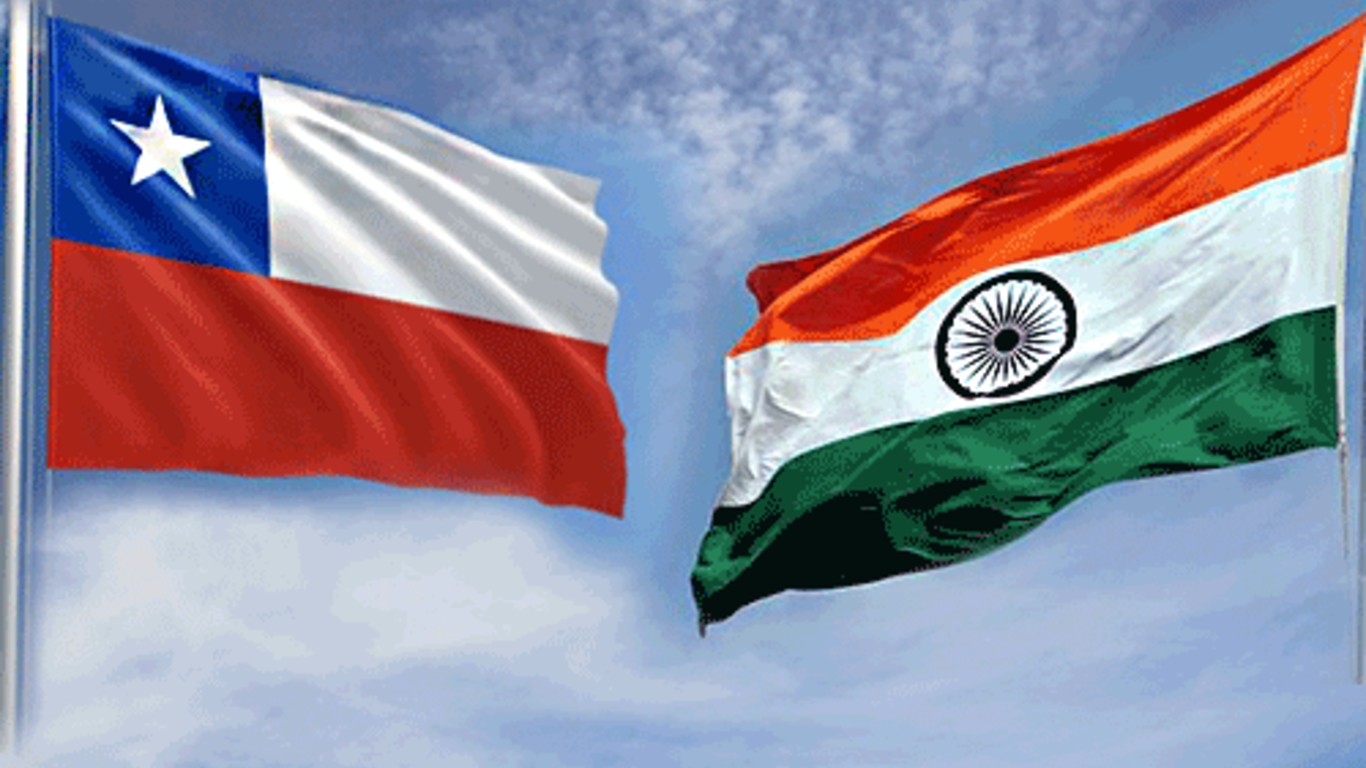
- 13 May 2025
In News:
Recently, India and Chile signed the Terms of Reference (ToR) to initiate negotiations for a Comprehensive Economic Partnership Agreement (CEPA), marking a significant step toward deepening bilateral economic ties.
Background and Significance
- The CEPA aims to expand and build upon the existing Preferential Trade Agreement (PTA) between the two countries by covering a broader range of sectors including digital services, investment promotion, MSMEs, and critical minerals.
- India and Chile share warm, strategic bilateral relations strengthened over years through high-level exchanges. The economic partnership began with a Framework Agreement in 2005, followed by a PTA in 2006, an expanded PTA effective from 2017, and further discussions towards CEPA since 2019.
- A Joint Study Group report finalized in April 2024 laid the foundation for advancing to a CEPA to unlock the full trade and investment potential between the two nations.
- The recent State visit of Chile’s President Gabriel Boric Font to India in April 2025 reaffirmed both countries’ commitment to enhancing trade frameworks and fostering a balanced, ambitious, and mutually beneficial economic agreement.
About Chile: Geopolitical and Economic Profile
- Chile is a long, narrow South American country bordered by Peru and Bolivia to the north, Argentina to the east, and the Pacific Ocean to the west.
- It shares the longest border in South America with Argentina, which is also the third-longest international border worldwide.
- Key geographical features include the Andes Mountains (the world’s longest continental mountain range), the Atacama Desert (driest non-polar desert globally), the Loa River (Chile’s longest river, approx. 440 km), and Ojos del Salado volcano (world’s highest active volcano at 6,880 meters).
- Situated on the Pacific Ring of Fire, Chile is prone to frequent earthquakes and tsunamis.
- Chile is the world’s largest producer of copper and a significant member of the “Lithium Triangle” (alongside Argentina and Bolivia), holding over 75% of global lithium reserves found in salt flats.
- Other important resources include molybdenum, iron ore, timber, hydropower, and precious metals.
Importance for India
- The CEPA negotiations with Chile are expected to enhance trade and investment flows, promote MSMEs, and strengthen cooperation in critical sectors such as minerals and digital services.
- This move aligns with India’s broader strategy to diversify economic partnerships globally and deepen ties with Latin American countries.
- Enhanced economic integration with Chile will boost employment, trade balance, and strategic cooperation between the two nations.
Arnala
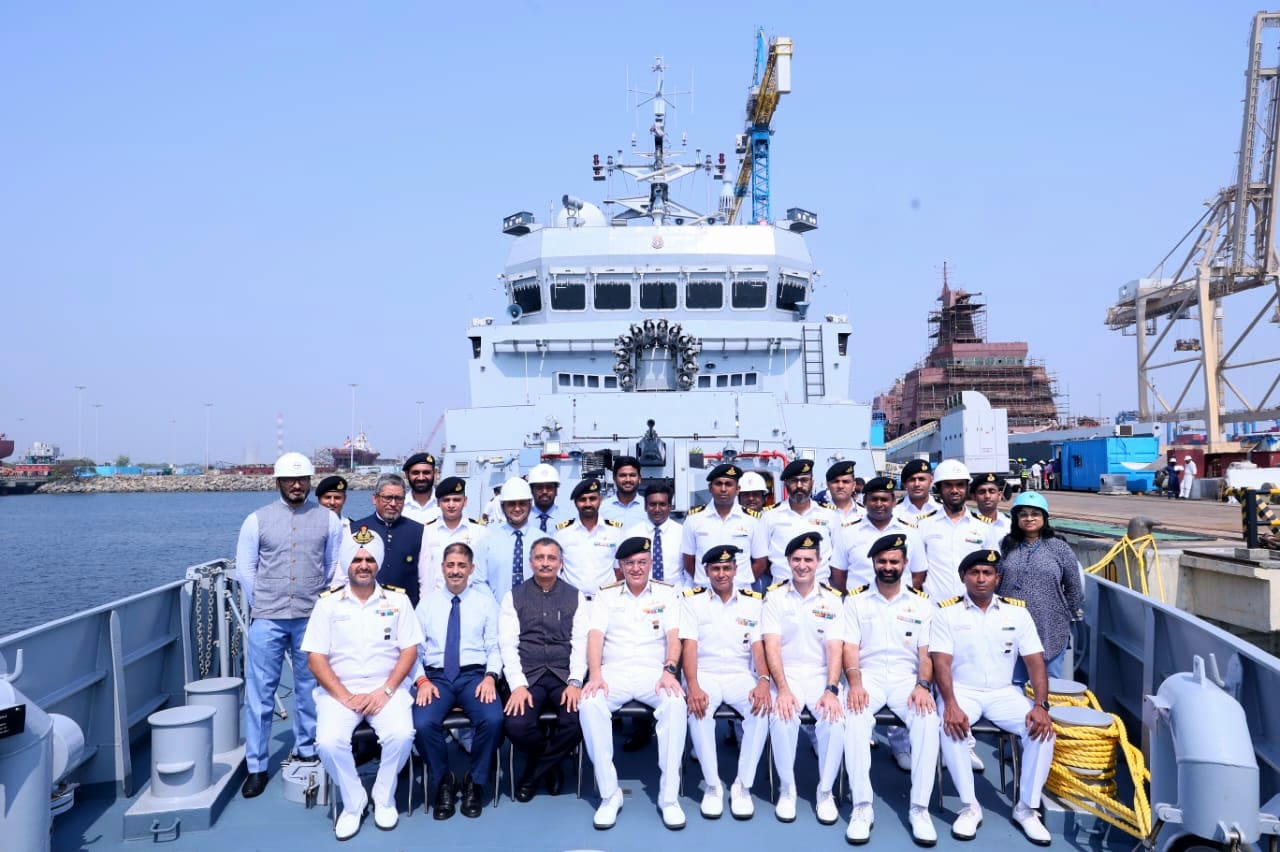
- 13 May 2025
In News:
Recently, the Indian Navy received Arnala, the first of eight indigenously designed and built Anti-Submarine Warfare Shallow Water Crafts (ASW SWCs). The vessel was constructed by Garden Reach Shipbuilders and Engineers (GRSE), Kolkata, in partnership with M/s L&T Shipyard, Kattupalli, under a Public-Private Partnership (PPP), exemplifying the growing collaboration in India’s defence manufacturing sector.
Key Features and Significance
- Arnala is named after the historic Arnala Fort located off Vasai, Maharashtra, symbolizing India’s rich maritime heritage.
- The ship measures 77 metres in length and is the largest Indian Naval warship powered by a Diesel Engine-Waterjet propulsion system.
- Designed and built according to the Indian Register of Shipping (IRS) classification rules, the vessel adheres to domestic naval architecture standards.
- Over 80% of the ship’s components are sourced indigenously, marking a significant stride toward the Government’s vision of ‘Aatmanirbhar Bharat’ in defence production.
Operational Roles
The Arnala class ASW SWCs are specialized for:
- Underwater surveillance in coastal and littoral zones
- Conducting search and rescue (SAR) operations
- Engaging in Low Intensity Maritime Operations (LIMO)
- Performing coastal Anti-Submarine Warfare (ASW) missions
- Advanced mine-laying activities
The induction of these vessels enhances India’s capabilities in shallow water ASW, critical for safeguarding maritime security in near-shore environments and ensuring dominance in the strategically vital littoral areas.
Strategic Importance
The delivery of Arnala signifies a major milestone in the Indian Navy’s ongoing efforts to promote indigenous shipbuilding and strengthen domestic defence manufacturing. It highlights successful public-private collaboration in advanced warship construction and contributes directly to India’s broader strategic goal of self-reliance in defence technology.
ALICE Experiment
- 13 May 2025
In News:
The ALICE collaboration at CERN’s Large Hadron Collider (LHC) has experimentally observed the conversion of lead nuclei into gold nuclei through a rare nuclear transmutation process. This discovery, reported in Physical Review C, marks the first systematic detection of gold production via electromagnetic dissociation at the LHC.
Historical Context: The Dream of Chrysopoeia
The idea of turning lead, a common base metal, into gold—a precious metal—dates back to medieval alchemy and is known as chrysopoeia. Alchemists were motivated by the similarity in density between lead and gold, but modern chemistry has established that chemical reactions cannot change one element into another since elements differ by their number of protons.
With the advent of nuclear physics in the 20th century, scientists learned that nuclear reactions could transmute elements, either naturally (radioactive decay) or artificially (particle accelerators). However, the ALICE experiment at CERN has revealed a novel mechanism of such transmutation involving near-miss collisions of lead nuclei.
Mechanism of Transmutation at the LHC
The LHC, located on the Franco-Swiss border near Geneva, is the world’s largest and most powerful particle accelerator. It accelerates two beams of lead nuclei (each containing 82 protons) to velocities close to the speed of light (about 99.999993% of the speed of light) inside a 27-kilometre ring.
During ultra-peripheral or near-miss collisions, lead nuclei pass close by each other without direct contact. The intense electromagnetic fields generated by the 82 protons in each lead nucleus compress into a short-lived pulse of photons, producing a process called electromagnetic dissociation.
This photon-induced excitation causes the nucleus to oscillate internally and emit a small number of protons and neutrons. When a lead nucleus (Pb-208) ejects three protons and two neutrons, it effectively becomes a gold nucleus (Au-203).
Role of ALICE Detector and Zero Degree Calorimeters (ZDCs)
The ALICE detector uses Zero Degree Calorimeters (ZDCs) to detect and count these nuclear dissociation events by measuring the number of emitted protons and neutrons. The emission of zero, one, two, or three protons corresponds to the creation of lead, thallium, mercury, and gold nuclei, respectively.
This capability allows ALICE to distinguish rare electromagnetic transmutations from the usual high-energy head-on collisions producing thousands of particles.
Key Findings and Quantitative Data
- The LHC produces gold nuclei at a rate of about 89,000 nuclei per second during lead–lead collisions.
- During LHC Run 2 (2015–2018), approximately 86 billion gold nuclei were generated.
- This corresponds to a mass of only 29 picograms (2.9 × 10?¹¹ grams), far too little for any practical use like jewelry.
- Run 3, with increased luminosity, has nearly doubled the amount of gold produced.
- The gold nuclei exist only for a fraction of a second before fragmenting into protons, neutrons, and other particles upon hitting the LHC’s beam pipe or collimators.
Significance
This discovery:
- Demonstrates a new pathway for nuclear transmutation via electromagnetic interactions at ultra-relativistic speeds.
- Provides experimental data that helps refine theoretical models of electromagnetic dissociation.
- Aids in understanding and predicting beam losses, which are critical for improving the performance of the LHC and future particle colliders.
About CERN and the LHC
- CERN (European Organisation for Nuclear Research), established in 1954, is Europe’s premier high-energy physics research organization with 23 member states and 10 associate members (including India).
- The LHC accelerates particles to nearly light speed in a 27-km circular tunnel under the Franco-Swiss border, facilitating collisions studied by four major experiments: ALICE, ATLAS, CMS, and LHCb.
- These experiments aim to probe fundamental particles and forces, test the Standard Model of particle physics, and explore conditions of the early universe.
20th Session of the United Nations Forum on Forests (UNFF20)
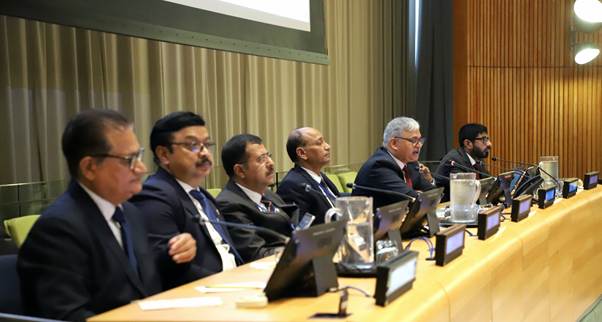
- 13 May 2025
In News:
India actively participated in the 20th session of the United Nations Forum on Forests (UNFF20) held from May 5 to 9, 2025, at the United Nations Headquarters, New York. UNFF, established in 2000 by the UN Economic and Social Council (ECOSOC), is the sole intergovernmental platform dedicated to global forest policy dialogue and coordination, aiming to promote sustainable forest management (SFM) and strengthen political commitment worldwide.
Key Objectives and Functions of UNFF
- Promotes conservation, management, and sustainable development of all forest types.
- Supports the implementation of Agenda 21, Rio Forest Principles, and the UN Strategic Plan for Forests 2017–2030.
- Oversees six voluntary Global Forest Goals (GFGs) and 26 targets, including reversing deforestation and enhancing forest governance.
- Facilitates cooperation through technical exchanges, policy development, financing mechanisms like the Global Forest Financing Facilitation Network, and advocacy linking forests with climate, biodiversity, and sustainable development.
India’s Highlights at UNFF20
India reaffirmed its commitment to the Voluntary National Contributions (VNCs) under the UN Strategic Plan for Forests 2017–2030, reporting progress in increasing its forest and tree cover, which now constitutes 25.17% of the country’s geographical area, as per the latest India State of Forest Report. Major achievements include:
- Restoration efforts under the Aravalli Green Wall project.
- A 7.86% increase in mangrove cover over the past decade.
- Afforestation of over 1.55 lakh hectares through the Green India Mission.
- Plantation of 1.4 billion seedlings under the “Ek Ped MaaKe Naam” (Plant4Mother) campaign.
Global Contributions and Initiatives
India extended an invitation to all UN member states to join the International Big Cat Alliance (IBCA)—a global platform launched by India to conserve seven big cat species through collaborative research, knowledge exchange, and capacity-building.
India also emphasized the importance of incorporating the outcomes of the Country-Led Initiative (CLI) on forest fire management and forest certification—hosted by India in Dehradun in October 2023—into formal global mechanisms. It acknowledged contributions from other countries such as the Republic of Congo, Democratic People’s Republic of Korea, and Austria in this initiative.
Policy and Technical Engagements
India hosted a side event titled “Restoring Degraded Forest Landscapes: India’s Approach to Sustainable Forest Management and Climate Resilience”, showcasing integrated forest restoration strategies combining policy innovation, resource convergence, community participation, and technology.
In a high-level panel on “Valuing Forest Ecosystems in National Policy and Strategy,” India shared pilot study findings from Uttarakhand, Rajasthan, and tiger reserves that quantified ecosystem services like carbon sequestration, water provisioning, and biodiversity conservation. India stressed the need to incorporate ecosystem valuation into national planning to enhance forest governance and ecological sustainability.
Significance of UNFF20
The session focused on advancing three Global Forest Goals:
- Reversing forest cover loss.
- Increasing protected and sustainably managed forests.
- Promoting forest governance and legal frameworks.
UNFF20 aimed to strengthen global dialogue following the 2024 midterm review of the international arrangement on forests and set the agenda for future policy deliberations in 2026. It underscored the critical role forests play in climate resilience, biodiversity, livelihoods, and sustainable development.
Thalassemia Burden in West Bengal higher than National Average

- 12 May 2025
In News:
On World Thalassemia Day, health experts in West Bengal highlighted the state’s significantly higher prevalence of Thalassemia carriers, ranging from 6% to 10%, compared to the national average of 3% to 4% (2011 Census). The elevated rate is mainly attributed to low awareness, intra-community marriages, and inadequate genetic screening.
What is Thalassemia?
- Definition: Thalassemia is a hereditary blood disorder marked by the body’s inability to produce adequate or normal haemoglobin, impairing oxygen transport in the blood.
- Genetic Cause:It arises from mutations or deletions in genes responsible for haemoglobin chains (alpha or beta globin), inherited from both parents.
- Types:
- Alpha Thalassemia: Involves up to four gene deletions; severity varies with number of deletions; common in Southeast Asian, Middle Eastern, and African populations.
- Beta Thalassemia: Caused by mutations in the beta-globin gene; prevalent in Mediterranean, South Asian, and Chinese communities. Includes:
- Thalassemia Minor: Carrier state with mild or no symptoms.
- Thalassemia Major (Cooley’s Anaemia): Severe form requiring lifelong blood transfusions.
- Symptoms:Fatigue, weakness, jaundice, facial deformities, stunted growth, enlarged spleen and liver, and breathlessness.
Thalassemia in India and West Bengal
- India sees about 10,000 to 15,000 babies born annually with Thalassemia Major (National Health Mission, 2016).
- Certain communities like Bengalis, Sindhis, Punjabis, and Gujaratis have higher carrier frequencies.
- West Bengal reports over 18,000 transfusion-dependent Thalassemia patients with a patient positivity rate of 2.5%.
Challenges in West Bengal
- Low Awareness: Many remain uninformed about genetic transmission and implications.
- Intra-community Marriages: Increase risk of two carriers marrying, leading to affected children.
- Insufficient Screening: Inadequate prenatal and adolescent screening limits early detection and prevention.
- No Legal Framework: India lacks laws to prevent marriages between carriers; awareness is the key preventive strategy.
Government Efforts and Recommendations
- West Bengal has established 36 Thalassemia Control Units (TCUs) across districts focusing on screening pregnant women (especially in the first trimester) and adolescents to reduce future disease incidence.
- Experts emphasize early parental screening, informed counseling, and timely medical care.
- Supportive care includes regular blood transfusions, iron chelation therapy, vaccinations, nutritional balance (low iron diet), infection prevention, and mental health counseling.
Expanded Credit Guarantee Scheme for Startups (CGSS)

- 12 May 2025
In News:
In a significant push to support innovation, domestic manufacturing, and startup growth, the Government of India has doubled the credit guarantee limit under the Credit Guarantee Scheme for Startups (CGSS) from ?10 crore to ?20 crore per borrower. Additionally, it has enhanced the guarantee coverage and reduced the guarantee fees for selected high-priority sectors.
About CGSS (Credit Guarantee Scheme for Startups)
- Launched: October 2022
- Under: Startup India Action Plan (initiated January 16, 2016)
- Nodal Ministry: Department for Promotion of Industry and Internal Trade (DPIIT), Ministry of Commerce and Industry
- Implemented by: National Credit Guarantee Trustee Company (NCGTC)
- Objective
- To enable collateral-free debt funding to DPIIT-recognised startups via:
-
- Term loans
- Working capital
- Venture debt and other fund-based/non-fund-based credit instruments
- To reduce the perceived credit risk for financial institutions and promote early-stage innovation, R&D, and self-reliant manufacturing.
Key Features of the Expanded CGSS
Parameter Previous Provision Revised Provision
Credit Guarantee Limit ?10 crore ?20 crore per borrower
Guarantee Coverage 75% 85% for loans ≤ ?10 crore, 75% for loans >
?10 crore
Annual Guarantee Fee (AGF) 2% 1% for startups in 27 Champion Sectors
Eligible Instruments Fund-based & non-fund based Includes venture debt, debentures,
subordinated debt
Guarantee Issuance Manual process Automated via NCGTC portal
Umbrella Guarantee Not earlier specified Covers pooled investments
(up to ?20 crore or 5% loss)
Eligible Startups & Lenders
Startups must be:
- Recognised by DPIIT
- Not classified as Non-Performing Assets (NPA)
- Certified eligible by the lending institution
Lending Institutions include:
- Scheduled Commercial Banks
- NBFCs (rated BBB+ and above, net worth ≥ ?100 crore)
- SEBI-registered Alternative Investment Funds (AIFs)
Focus on Champion Sectors
To strengthen the Make in India initiative, the reduced AGF of 1% applies to 27 Champion Sectors, which include:
- 15 Manufacturing Sectors:Aerospace &defence, automotive components, biotechnology, chemicals, petrochemicals, electronics, pharmaceuticals, etc.
- 12 Services Sectors:IT &ITeS, tourism, hospitality, medical value travel, accounting and finance, audio-visual services, among others.
Expected Outcomes
- Improved Credit Access: More financial institutions are expected to extend funding to startups due to increased guarantee coverage and reduced risk.
- Encouragement for Innovation: Easier credit access will facilitate R&D, product development, and new-age technological innovation.
- Boost to Self-Reliance: Priority manufacturing and service sectors will benefit from reduced funding costs, promoting Atmanirbhar Bharat.
- Alignment with Viksit Bharat Vision: Supports long-term goals of inclusive economic growth through entrepreneurship and job creation.
Discovery of Chirality in KV?Sb?
- 12 May 2025
In News:
In a major advancement in condensed matter physics, researchers have identified a chiral quantum state in KV?Sb?, a topological material with a Kagome lattice structure. This discovery is significant as the material was earlier thought to be non-chiral, making this the first observation of intrinsic chirality in a bulk topological quantum system.
What is Chirality?
- Chirality refers to the geometric property of an object not being superimposable on its mirror image—a concept known as "handedness".
- It is common in nature, observed in:
- Amino acids
- The double helical structure of DNA
- Spiral patterns in biological systems
- Molecules often exist in left-handed (L) and right-handed (D) forms, a feature crucial to both biochemistry and quantum physics.
About KV?Sb? and the Kagome Lattice
- KV?Sb? is a bulk quantum material characterized by a Kagome lattice—a structure formed by corner-sharing triangles.
- The Kagome pattern, originating from Japanese basket-weaving, serves as a fertile platform for investigating topological and quantum phenomena like superconductivity, charge ordering, and now, chirality.
Scientific Technique Used
- Researchers employed a novel tool called the Scanning Photocurrent Microscope (SPCM).
- Unlike Scanning Tunnelling Microscopy (STM), which offers atomic-resolution images, SPCM is designed to detect nonlinear electromagnetic responses in materials.
- The SPCM detected handedness in the photocurrent, confirming the circular photogalvanic effect (CPGE)—a definitive marker of chirality.
Key Findings
- The material exhibited spontaneous symmetry breaking, particularly the formation of a charge density wave (CDW).
- At 4 Kelvin, KV?Sb? responded differently to right- and left-handed circularly polarized light, demonstrating the breaking of mirror and inversion symmetries.
- This confirms the presence of intrinsic chiral charge order, marking the first such observation in a bulk topological material.
23rd South Asia Press Freedom Report (2024–25)
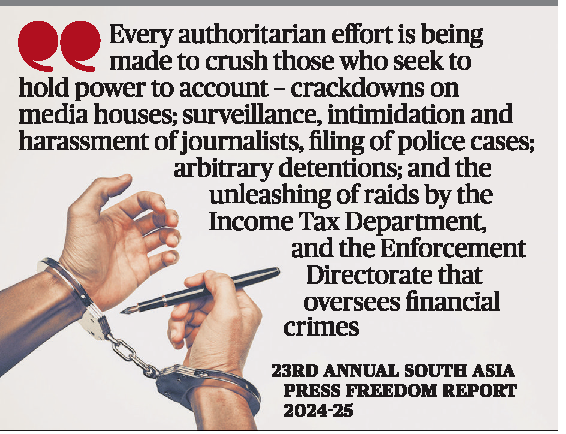
- 12 May 2025
In News:
The 23rd Annual South Asia Press Freedom Report 2024–25, titled “Frontline Democracy: Media and Political Churn”, flags a concerning decline in media freedom across South Asia, including India. Published by the Asia Press Freedom group, the report assesses press conditions in eight countries: India, Pakistan, Afghanistan, Sri Lanka, Bangladesh, Nepal, Bhutan, and the Maldives.
Key Findings
- Over 250 violations of media rights recorded.
- 69 journalists were jailed or detained; 20 killed in the line of duty.
- India ranked 151st globally in press freedom; Bhutan dropped to 152nd—its lowest ever.
- Pakistan witnessed its most violent year for journalists in two decades, with eight killed.
India-Specific Observations
Legal and Institutional Suppression
- Increasing use of stringent laws like UAPA, PMLA, defamation, and sedition against journalists.
- Media organizations critical of the government have faced IT raids, ED investigations, and denial of government advertising.
- These actions have led to widespread self-censorship and a chilling effect on critical reporting.
Disinformation and Political Interference
- Political IT Cells play a key role in spreading fake news and hate speech, deepening the trust deficit in mainstream media.
- The Global Risks Report 2024 identifies “manipulated information” as the world’s most serious short-term threat.
Digital & Economic Challenges
- AI-generated content undermines journalistic credibility and originality.
- Media workforce faces challenges from:
- Declining advertisement revenue
- Contractualisation under new labour codes
- Mergers and corporate restructuring
- Precarity of gig and freelance journalists
Gender Inequality
- Poor representation of women in newsroom leadership roles.
- Pervasive gender-based harassment remains unaddressed.
Impacts of Eroding Media Freedom
- Democratic Deficit: Weakens the role of the press as the fourth pillar of democracy.
- Public Mistrust: Rising perception of media bias and loss of credibility.
- Reduced Information Access: Laws like the DPDP Act 2023 and changes to RTI provisions hinder public transparency.
Balochistan
- 12 May 2025
In News:
On May 9, 2025, Mir Yar Baloch announced the unilateral declaration of independence for Balochistan from Pakistan. In a public appeal, he urged India to formally recognize Balochistan as a sovereign state and open an embassy in New Delhi. He also called upon the United Nations to deploy peacekeeping forces and demanded the withdrawal of the Pakistani military from the region.
Geographical Profile
- Location: Balochistan lies in the southwestern part of Pakistan and is the country’s largest province by area, comprising nearly 44% of its total territory.
- Area: Approximately 347,190 square kilometers
- Capital: Quetta, situated near the Afghanistan border
- Borders:
- East: Sindh and Punjab provinces
- West: Iran
- Northwest: Afghanistan (across the Durand Line)
- South: Arabian Sea, with a coastline of around 770 km
Topography and Climate
- Characterized by rugged, mountainous terrain (notably the Sulaiman and Makran ranges)
- Arid and semi-arid climate zones, including desert and dry steppe regions
- Low population density, yet abundant in untapped mineral wealth
Demographics and Ethnicity
- Major Ethnic Group: The Baloch, who trace their ancestry to Iranian origins
- Other Communities: Pashtuns in the northern areas, and the Brahui ethnic group
- Languages Spoken: Balochi, Pashto, Brahui, and Urdu
- Religion: Predominantly followers of Sunni Islam
Strategic and Geopolitical Significance
Natural Resource Wealth
- Balochistan is rich in natural gas, coal, copper, and gold.
- The RekoDiq mining site is among the world’s largest undeveloped gold and copper reserves.
- The province contributes about 40% of Pakistan’s natural gas production, yet remains economically underdeveloped and politically marginalized.
China-Pakistan Economic Corridor (CPEC)
- Gwadar Port, located in southern Balochistan, is a critical node in China’s Belt and Road Initiative (BRI).
- It provides China with direct maritime access to the Arabian Sea and strategic connectivity to West Asia, bypassing the Strait of Malacca.
India’s Strategic Perspective
- India has consistently highlighted human rights violations in Balochistan at international forums.
- The region’s geostrategic position intersects with India’s Indo-Pacific vision, and is relevant in India’s efforts to counter China’s growing footprint through CPEC.
Insurgency and Security Dynamics
- Balochistan has long witnessed separatist movements led by Baloch nationalist groups seeking either enhanced autonomy or full independence from Pakistan.
- These groups frequently target Pakistani military convoys, CPEC infrastructure projects, and Chinese nationals working in the region, signaling strong opposition to external control and resource exploitation.
SCALP Missile
- 11 May 2025
In News:
During Operation Sindoor, the Indian Air Force reportedly employed SCALP missiles launched from Rafale fighter jets to target high-value terror infrastructure in Pakistan and Pakistan-occupied Kashmir (PoK).
What is the SCALP Missile?
- The SCALP (Système de CroisièreAutonome à Longue Portée) is a long-range, air-launched cruise missile designed for deep-strike missions.
- It is also known by its British designation, Storm Shadow.
- Developed jointly by France and the United Kingdom, it is built for precision attacks on strategic, fixed, and fortified targets.
- Global Operators: The missile is in operational use by the air forces of:India, France, United Kingdom, Egypt, Italy, Greece, Saudi Arabia, Qatar, and UAE.
- Indian Integration: The Indian Air Force has integrated the SCALP missile with its Rafale fleet, enhancing India's capacity to conduct long-range precision strikes with minimal collateral damage.
Key Features:
Feature Description
Range Approximately 500 km
Warhead 450 kg high-explosive, designed to penetrate hardened structures
Weight Around 1,300 kg
Dimensions Length: ~5 metres; Wingspan: ~3 metres
Speed Subsonic (around Mach 0.8)
Guidance Systems Combined GPS/INS navigation, terrain-following radar, and
infrared homing for terminal precision
Stealth Capability Optimized for low-altitude flight to evade radar detection
Accuracy Uses image-based terminal guidance to match
preloaded target images
All-weather Capability Can operate under diverse weather conditions
Kosmos 482
- 11 May 2025
In News:
A 500-kg fragment of the Soviet-era Kosmos 482 spacecraft, launched in 1972 as part of the Venera programme, is expected to make an uncontrolled re-entry into Earth’s atmosphere around May 10, 2025, after over 53 years in orbit.
What was the Kosmos 482 Mission?
- Launched: March 31, 1972, by the Soviet Union.
- Objective: To land a probe on Venus and collect atmospheric and surface data.
- Programme: Part of the Venera series (1961–1984), which launched 28 probes to Venus.
- 13 entered the Venusian atmosphere.
- 10 successfully landed on the surface.
- Twin Mission:Venera 8, launched on March 27, 1972, successfully landed on Venus and transmitted data for 50 minutes.
Mission Failure and Orbit Status
- The mission failed due to a timer malfunction in the rocket's upper stage, which shut down prematurely, leaving the spacecraft stranded in low Earth orbit instead of heading to Venus.
- The main spacecraft eventually burned up in the atmosphere, but a lander module (approx. 500 kg) remained in orbit.
Expected Re-entry (May 2025)
- The lander module is currently being dragged down by atmospheric friction.
- No precise location or time of impact is known due to the uncontrolled nature of its descent.
- Expected re-entry corridor lies between 52° North and 52° South latitude, covering:
- Africa, Australia
- Most of the Americas
- Much of southern and mid-latitude Europe and Asia
Is it a risk to Earth?
- The lander is made of titanium, with a melting point of ~1,700°C, higher than typical atmospheric re-entry temperatures (~1,600°C).
- This increases the likelihood of survival through re-entry.
- Possible outcomes as per space debris experts:
- “A splash” (ocean impact) — least dangerous
- “A thud” — impact on uninhabited land
- “An ouch” — impact on populated area (least desired scenario)
- If intact, the object could impact Earth at a speed of ~242 km/h, similar to a high-speed train.
HAROP Drone
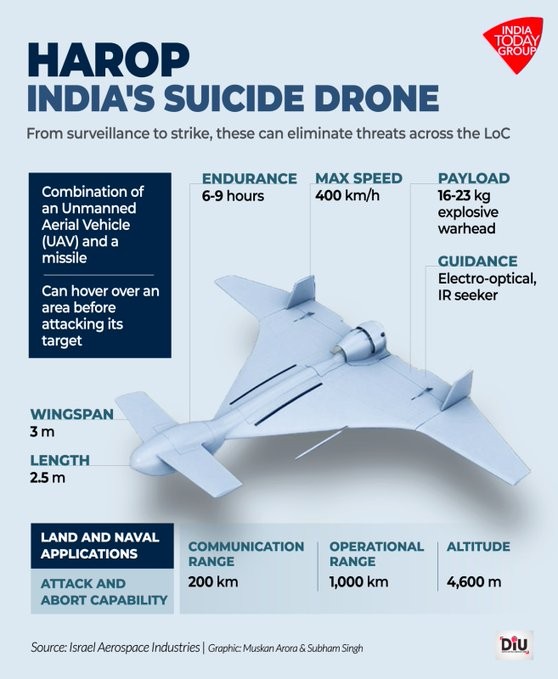
- 11 May 2025
In News:
On May 8, 2025, as part of Operation Sindoor, India reportedly used Israeli-made HAROP loitering munitions to destroy a Pakistani air defence system in Lahore, in response to Pakistan’s attempted attacks on Indian military installations.
What is HAROP?
- HAROP is an advanced loitering munition, also known as a suicide drone or kamikaze drone.
- Developed by Israel Aerospace Industries (IAI), it combines features of a UAV and a missile.
- It is designed to loiter over an area, search for high-value targets, and crash into the target with an explosive payload.
Key Characteristics and Capabilities
Feature Description
Function Combines surveillance and attack roles; can loiter, identify, and
strike autonomously or manually
Targets Designed to hit air defence systems, radars, command posts,
tanks, and moving military assets
Sensor Equipped with an Electro-Optical (EO) sensor for real-time
target tracking and acquisition
Endurance Up to 9 hours of loitering capability for deep-target missions
Launch Platforms Can be launched from truck-mounted canisters,
naval vessels, or ground stations
Navigation Resistance GNSS (GPS)-jam resistant, effective in communication-
denied environments
Strike Profile Executes attacks from various angles using
steep or shallow dive maneuvers
Evolution and Operational Use
- HAROP is an evolution of the earlier HARPY system, which was radio-frequency (RF) guided.
- Unlike the HARPY, HAROP uses EO sensors for improved visual target identification.
- HAROPs are "fire-and-forget" weapons, meaning they do not require active control after launch.
- The system has been described by IAI as the “King of the Battlefield”, with a claimed mission success rate of 98%.
- Proven effective in multiple combat scenarios, including suppression of enemy air defences (SEAD).
Carbon Border Adjustment Mechanism (CBAM)
- 11 May 2025
In News:
India has warned it will retaliate if the United Kingdom implements its proposed Carbon Border Adjustment Mechanism (CBAM) from January 1, 2027, calling it a violation of the Common But Differentiated Responsibilities (CBDR) principle of international climate agreements.
What is Carbon Border Adjustment Mechanism (CBAM)?
- It is a carbon tax on imports based on their carbon intensity of production.
- Aim: Prevent carbon leakage by aligning the cost of carbon between domestic and foreign producers.
- Sectors likely to be initially targeted include steel, cement, aluminium, and energy-intensive products.
- The UK is expected to implement its version of CBAM in 2027, following a similar approach by the European Union.
India’s Concerns
- Violation of CBDR Principle
- CBAM undermines the UNFCCC and Paris Agreement, which recognize that developing countries require flexibility and support for decarbonization.
- India’s per capita emissions are low, but its carbon intensity is higher due to developmental needs.
- Unfair Trade Practice
- CBAM could nullify tariff concessions negotiated under the India–UK Free Trade Agreement (FTA).
- Finance Minister Nirmala Sitharaman and Commerce Minister Piyush Goyal have labelled CBAM “unfair” and discriminatory.
- Double Taxation and Export Losses
- Indian exporters may face double taxation—domestic environmental levies and UK’s border tax.
- India proposed a ‘rebalancing mechanism’ and MSME carve-out, both of which the UK declined.
- Export-heavy sectors like textiles, leather, ceramics, engineering goods, and steel may be hit hard due to sustainability compliance burdens.
- MSME Vulnerability
- Labour-intensive MSMEs lack the capacity to meet expensive ESG norms and carbon tracking requirements.
- India's request for exemption or compensation for MSMEs was not accepted.
India’s Response Strategy
- India reserves the right to retaliate if CBAM is imposed.
- Potential responses include:
- Domestic carbon taxation to offset UK’s CBAM and use revenue for green transition.
- Invoking a rebalancing clause under the FTA’s “general exceptions” (similar to GATT), allowing trade countermeasures for environmental or public interest.
Strategic Implications for India
- Non-tariff barriers like CBAM can undermine market access gained through FTAs.
- India must stay alert to evolving trade conditions involving environment, labour, IPR, and gender standards, which often require policy adjustments.
- Calls for India to strengthen its carbon tracking, ESG frameworks, and climate-compliant production systems to remain globally competitive.
Saola Genome Mapping
- 11 May 2025
In News:
An international team of scientists has successfully mapped the genome of the saola (Pseudoryxnghetinhensis), the world’s rarest large land mammal, providing critical insights for conservation through genetic rescue and captive breeding.
About Saola
- Common Name: Asian Unicorn
- Scientific Name: Pseudoryxnghetinhensis
- First Described: 1993 (based on a skull found in Vietnam in 1992)
- Classification: Bovine species, closely related to cattle but resembling an antelope
- Habitat: Endemic to the Annamite Mountains along the Laos–Vietnam border; prefers humid evergreen forests
- IUCN Status: Critically Endangered
- Estimated Population (2015): 50–300 individuals
- Physical Traits:
- Height: ~33 inches at shoulder
- Both sexes possess straight, parallel horns (~20 inches)
- Distinct white facial markings and muzzle scent glands
Major Threats
- Habitat loss, primarily due to agricultural expansion and forest degradation
- Poaching and indiscriminate snaring, including by-catch in traps set for other animals
- Lack of successful captive care: Over 20 captured saolas died in the 1990s due to inadequate professional care
Genome Mapping and Key Findings
- Sample Base: Genomes of 26 individuals sequenced using remains sourced from hunter households
- Population Divergence: Two genetically distinct populations emerged 5,000–20,000 years ago, likely due to:
- Forest fragmentation during/after the Last Glacial Maximum
- Expansion of human activities such as agriculture, burning, and hunting around 4,000 years ago
- Genetic Complementarity: Each population retains different genetic variants, offering potential for enhanced genetic diversity if combined
- Scientific Importance:
- Confirms historical population isolation and genetic loss
- Provides a genetic foundation for targeted conservation efforts
Conservation Implications
- Captive Breeding Program: Plans underway in Vietnam to establish a well-equipped breeding center
- Goal: Capture at least a dozen individuals from both genetic lineages to create a genetically resilient population
- Long-term Vision: Reintroduction into protected forest areas with strict anti-poaching measures
Mission Sankalp
- 10 May 2025
In News:
Mission Sankalp is a large-scale counter-insurgency operation launched jointly by security forces of Chhattisgarh Police, Telangana Police, CRPF, and the elite CoBRA unit. The operation targets the dense forested Karregutta hills along the Chhattisgarh–Telangana border, focusing on dismantling Maoist strongholds and disrupting their operational capabilities.
Key Objectives and Area of Operation
- Primary Aim: Neutralize senior Maoist leaders, especially targeting Battalion 1 of the People’s Liberation Guerrilla Army (PLGA), the armed wing of the CPI-Maoist.
- Geographical Focus: Forested, hilly terrain covering parts of Bijapur district (Chhattisgarh) and Mulugu district (Telangana).
- Goals: Destroy Maoist hideouts, bunkers, arms caches, and logistics networks to cripple the insurgency infrastructure.
Forces Involved and Operational Scale
- Personnel: Over 28,000 personnel including District Reserve Guard (DRG), Bastar Fighters, Special Task Force (STF), CRPF, CoBRA, and support from the Indian Air Force.
- Tactics: Precision strikes guided by aerial surveillance and intelligence inputs in challenging forest terrain.
- Scope: The operation spans approximately 800 square kilometres across the inter-state border area.
Achievements and Impact
- Casualties and Encounters: Since its launch on April 21, around 35 encounters have taken place. At least 26 Maoists, including several senior cadres and three women cadres with bounties of ?8 lakh each, have been killed. Approximately 168 Maoists have been eliminated across Chhattisgarh in 2025, with 151 in the Bastar region.
- Seizures: Security forces have recovered over 2 tonnes of explosives, 400+ improvised explosive devices (IEDs), around 40 firearms, and more than 6 tonnes of ration, medicines, and daily essentials. Hundreds of Maoist hideouts and bunkers have been destroyed.
- Casualties Among Security Forces: Six personnel, including a CoBRA officer, were injured in IED blasts but are now stable.
- Strategic Outcome: The operation has dealt a severe blow to the Maoist command structure, disrupted logistics, and restored state authority in previously inaccessible tribal areas.
Strategic Importance
- Inter-State Cooperation: Mission Sankalp marks one of the largest coordinated anti-Naxal operations in recent years, reflecting enhanced synergy between central and state security forces.
- National Security: It aligns with the Centre’s zero-tolerance policy towards Left Wing Extremism, aiming to weaken the Maoists’ influence and support the restoration of governance and development in affected tribal regions.
- Long-Term Goals: By neutralizing the insurgency's core military units, the operation seeks to create conditions for improved infrastructure, welfare delivery, and civilian confidence in law enforcement.
New Framework for Regulation Formulation and Public Consultation
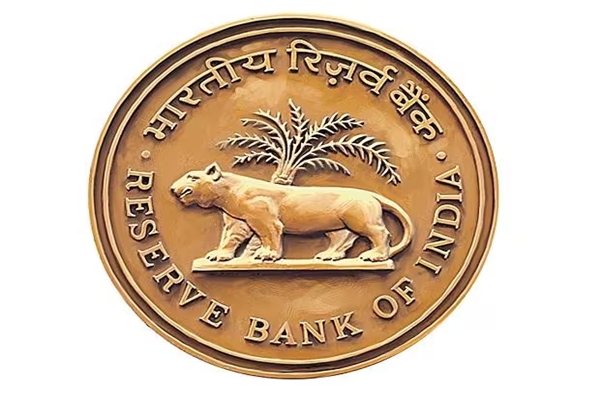
- 10 May 2025
In News:
The Reserve Bank of India (RBI) has introduced a structured framework designed to standardize the creation and revision of its regulatory policies. This initiative aims to enhance transparency, consistency, and public engagement throughout the regulatory process.
Key Aspects of the Framework
- Unified Application:The framework covers all forms of RBI regulations, including directions, guidelines, notifications, policies, and standards.
- Mandatory Public Consultation:Draft regulations are required to be published on the RBI’s official website along with a detailed Statement of Particulars. These drafts will remain open for public comments for a minimum period of 21 days, allowing stakeholders to provide their inputs.
- Impact Evaluation:Each draft must clearly outline its objectives, conduct an impact assessment, and reference relevant international best practices and global standards to ensure comprehensive evaluation.
- Response to Feedback:After considering public comments, the RBI will release a summary addressing the feedback alongside the final version of the regulations.
- Regular Review:Existing regulations will undergo periodic reassessment based on supervisory insights, alignment with global developments, and their continued applicability in a dynamic environment.
Significance of the Framework
- Enhances Transparency and Inclusiveness:By inviting public participation, the framework ensures a more open and accountable regulatory process.
- Encourages Evidence-Based Policy:The incorporation of impact analysis and stakeholder feedback supports more informed and effective policymaking.
- Aligns with Global Standards:The framework positions India’s regulatory governance in harmony with international best practices.
- Boosts Regulatory Efficiency:Continuous review and rationalization help in eliminating redundant regulations and improving overall governance.
International Maritime Defence Exhibition (IMDEX) Asia 2025
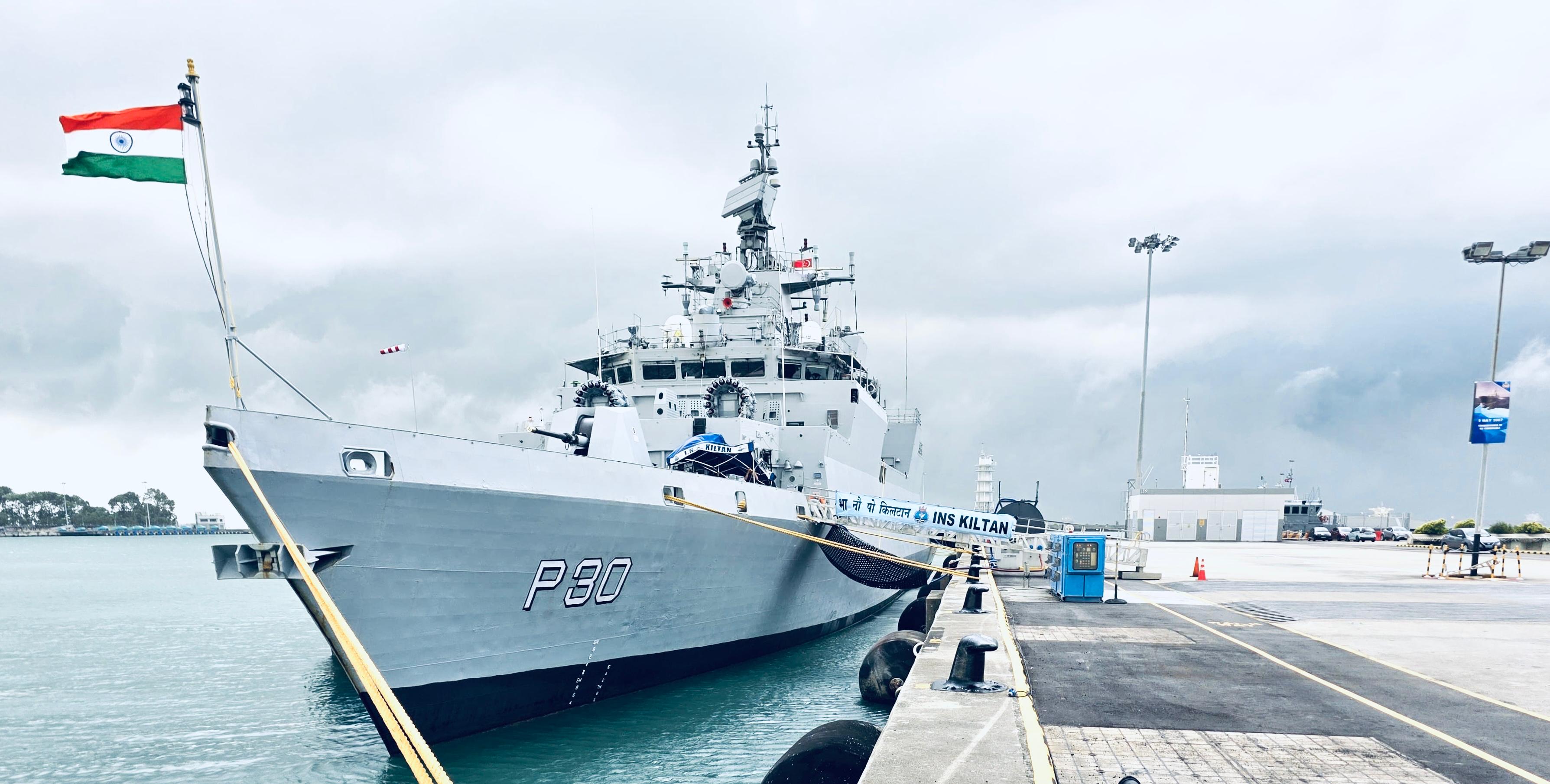
- 10 May 2025
In News:
The International Maritime Defence Exhibition (IMDEX) Asia is a leading biennial maritime and defence event in the Asia-Pacific region, held since 1997 in Singapore at the Changi Exhibition Centre. It serves as a key global platform for navies, coast guards, and maritime defence industries to showcase advanced naval platforms, cutting-edge technologies, and engage in strategic dialogue.
Indian Navy’s Participation
- In May 2025, the Indian Naval Ship INS Kiltan arrived in Singapore to participate in IMDEX Asia 2025.
- This deployment forms part of the Indian Navy’s operational commitments and highlights the strong maritime partnership between India and Singapore.
- During the exhibition, the Indian Navy crew engaged in multiple bilateral and multilateral activities, including professional exchanges with the Republic of Singapore Navy (RSN) and other participating navies.
- Activities included guided tours for schoolchildren, cross-deck visits with other navies, and curated visits for defence industry representatives to promote awareness of maritime security and India’s naval heritage.
Key Features of IMDEX Asia
- Platform for Defence Collaboration: IMDEX Asia facilitates showcasing of naval systems and debut of advanced maritime technologies.
- Strategic Dialogue: The event hosts high-level policy discussions and strategic dialogues on maritime security.
- International Maritime Security Conference (IMSC):
- Established in 2009, IMSC is a crucial component of IMDEX.
- Jointly organised by the Republic of Singapore Navy and the S. Rajaratnam School of International Studies (RSIS).
- It convenes navy chiefs, coast guard leaders, policymakers, and strategic analysts.
- The conference aims to enhance mutual maritime security, improve maritime domain awareness, and foster cooperative responses to challenges in the global maritime commons.
Significance
- The Indian Navy’s participation in IMDEX Asia underlines its commitment to regional maritime security and stability.
- It also reinforces the longstanding friendly ties between India and Singapore and highlights the importance of naval interoperability and defence cooperation in the Indo-Pacific region.
Persian Gulf vs Arabian Gulf
- 10 May 2025
In News:
The United States, under then-President Donald Trump, proposed a shift in terminology by referring to the Persian Gulf as the “Arabian Gulf” during a state visit to Saudi Arabia, aligning with the preferences of some Arab Gulf countries.
Historical and Geopolitical Background
- The name “Persian Gulf” has been historically documented since the 16th century, appearing in treaties, maps, and international references.
- Arab countries such as Saudi Arabia, UAE, and Bahrain use the term “Arabian Gulf” in national documents and cartography.
- The proposal by Trump faced criticism from Iran, which regards the renaming as a politically motivated act aimed at undermining its historical and cultural identity.
Iran’s Response
- Iran’s leadership, including Foreign Minister Abbas Araghchi, has condemned any attempt to alter the name, calling it a hostile and invalid act with no legal or geographical legitimacy.
- In 2012, Iran had threatened to sue Google for omitting the name "Persian Gulf" from its maps.
International Standards
- The International Hydrographic Organisation (IHO), responsible for standardizing maritime names, continues to officially recognise the name “Persian Gulf.”
- While countries can adopt different terms domestically, they cannot enforce global changes unilaterally.
Geographical Features of the Persian Gulf
- Type: Marginal sea of the Indian Ocean, located in Western Asia.
- Size: ~251,000 km²
- Depth: Average ~50 m; Maximum ~90 m
- Coastline: ~5,117 km; Iran has the longest stretch (~1,536 km)
- Borders:
- North: Iran
- Southwest: Saudi Arabia, UAE, Qatar
- Northwest: Iraq, Kuwait, Bahrain
- Islands:
- Qeshm Island (Iran): Largest in the Gulf (~1,491 km²)
- Bahrain: Sovereign island nation with over 50 islands and a key US naval base
Strategic and Economic Significance
- The Strait of Hormuz, linking the Persian Gulf to the Arabian Sea, is a critical chokepoint for global energy, with ~30% of global oil exports passing through.
- The region is a theatre of military presence, with navies of the US, Iran, and Gulf countries asserting control and influence.
- Strategic islands like Qeshm and Bahrain hold economic and military importance.
Operation Sindoor
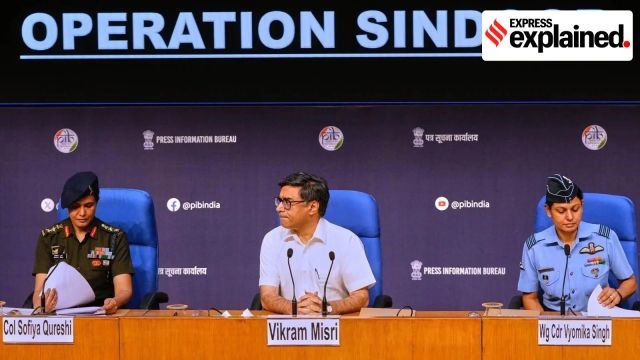
- 10 May 2025
In News:
On May 7, 2025, the Indian Armed Forces launched Operation Sindoor, a coordinated precision strike on terrorist camps located in Pakistan and Pakistan-occupied Kashmir (PoK). The operation was a response to the killing of civilians in Pahalgam by Pakistan-backed terrorists.
Key Facts:
- 21 terror camps across 9 locations were targeted.
- Advanced niche-technology weapons were employed to ensure minimal collateral damage.
- The operation highlights India's evolving capability in long-range, precision-guided weaponry.
Major Precision-Guided Weapons in India’s Arsenal
1. HAMMER (Highly Agile and Manoeuvrable Munition Extended Range)
- Origin: France (by Safran)
- Platform: Integrated with Rafale fighter jets
- Range: Up to 70 km
- Features:
- All-weather precision
- Autonomous guidance
- Jamming-resistant
- Operable at low altitude over rough terrains
- Role in Operation: Likely used for air-to-ground strikes on tactical targets.
2. SCALP (Storm Shadow in UK)
- Type: Air-launched stealth cruise missile
- Origin: Europe (by MBDA)
- Range: Up to 450 km
- Navigation: Uses INS, GPS, and terrain referencing
- Capabilities:
- Bunker-penetration
- Low radar signature
- All-weather and night operable
- Relevance: Designed for deep precision strikes, ideal for hardened terrorist infrastructure.
3. METEOR
- Type: Beyond Visual Range Air-to-Air Missile (BVRAAM)
- Origin: MBDA (Europe)
- Propulsion: Solid-fuel ramjet for sustained high-speed interception
- Special Feature: Large No-Escape Zone, effective in electronic warfare conditions
- Use Case: Enhances air superiority and can neutralize enemy aircraft before visual contact.
4. BRAHMOS Supersonic Cruise Missile
- Developed by: DRDO (India) and NPOM (Russia) under BrahMos Aerospace
- Speed: Mach 2.8–3.0
- Range: Initially 290 km, now extended to 450–500 km after India’s MTCR entry
- Warhead: 200–300 kg
- Platforms: Compatible with land, sea, and air platforms
- Features:
- Fire-and-Forget
- Precision strike at low terminal altitude (~10 m)
- Strategic Role: Provides rapid, stealthy, and accurate strikes across the services.
5. Loitering Munitions ("Kamikaze Drones")
- Function: Combines surveillance and strike capabilities
- Features:
- Can loiter over target zones
- Autonomous or semi-autonomous targeting
- High precision against time-sensitive or mobile targets
- Adoption: Increasing induction across the Army, Navy, and Air Force
India–U.S. Energy Cooperation
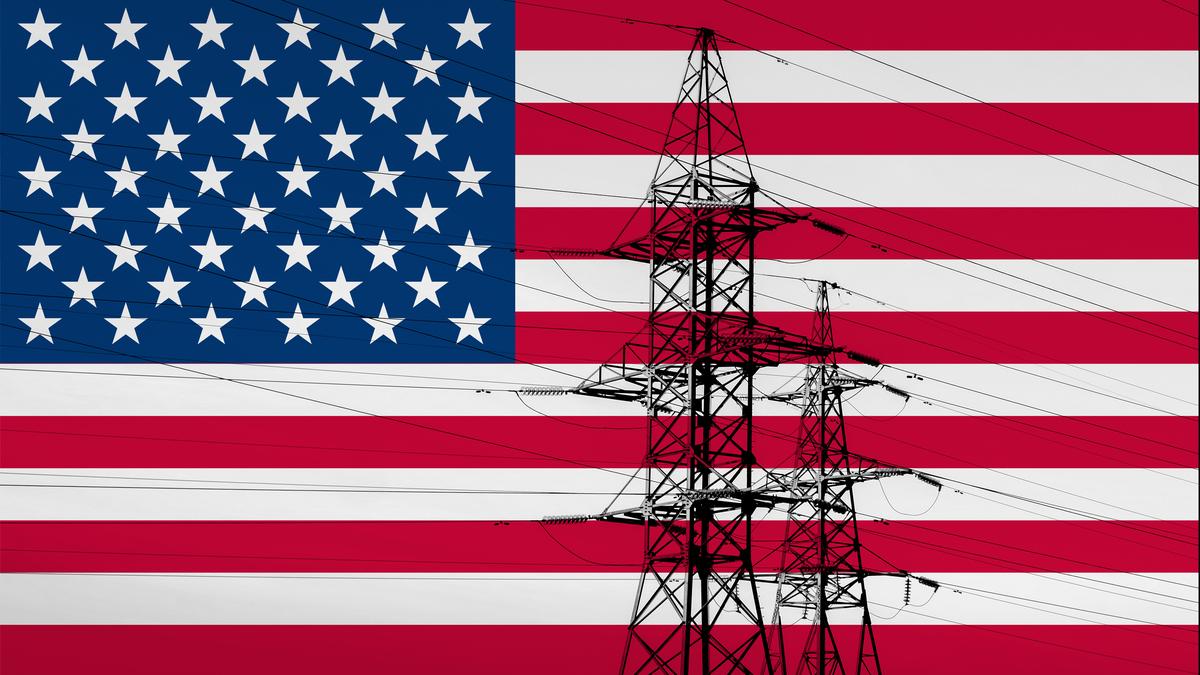
- 09 May 2025
In News:
U.S. Vice-President J.D. Vance recently reaffirmed strong bilateral engagement with India in the domains of energy and defence. In parallel, India underscored the need to prioritiseenergy security, technology transfer, and collaboration on critical minerals as pillars of this strategic partnership.
Major India–U.S. Energy Initiatives
- Strategic Clean Energy Partnership (SCEP):Facilitates cooperation across bioenergy, solar power, hydrogen fuels, and energy efficiency measures.
- Initiative on Critical and Emerging Technology (iCET):Focused on advanced technologies such as clean energy, Artificial Intelligence (AI), quantum computing, and Small Modular Reactors (SMRs).
- Civil Nuclear Cooperation:Aims to enhance technology exchange and investments aligned with India’s goal of achieving 100 GW of nuclear capacity by 2047.
- Critical Minerals MoU (2024):Establishes a framework for resilient and transparent supply chains for rare earth elements and critical minerals, along with potential third-country investment opportunities.
Rationale for Strengthening the Energy Partnership
- Energy Security:India’s transition to a $5 trillion economy requires uninterrupted, affordable energy access.
?Example: India's energy import bill reached $153 billion in FY 2023–24, highlighting the need for long-term partnerships. - Climate Commitments:To achieve net-zero emissions by 2070, India must scale up investments in low-carbon technologies, including nuclear, renewables, and green hydrogen.
- Mineral Supply Chain Diversification:With China dominating over 90% of rare earth processing, India seeks reliable and democratic supply partnerships to support its clean energy transition.
- Infrastructure and Financing Needs:Developing nuclear energy infrastructure alone could demand over $180 billion by 2047, requiring foreign capital, joint ventures, and technology collaboration.
Proposed Roadmap for Enhancing Bilateral Energy Ties
- Legal Reform:Revisit the Civil Liability Act to facilitate private sector participation in India's nuclear sector.
?Example: Proposed transfer of SMR technology from Holtec to Indian companies (e.g., L&T, Tata Consulting) requires legal assurances. - Strategic Mineral Reserves Collaboration:Joint stockpiling via India’s Strategic Petroleum Reserves and the U.S. National Defense Stockpile can buffer supply shocks.
- India–U.S. Mineral Exchange Platform:Launch a digital trade and traceability platform using blockchain technology to enhance transparency and co-investment.
- Leverage the Quad Partnership:Deepen trilateral mineral partnerships with Australia and Japan, focusing on processing facilities, R&D hubs, and outreach to resource-rich African nations.
- Accelerate Nuclear Rollout:Standardise nuclear reactor designs, streamline regulatory approvals, and aim to install 5–6 GW of new nuclear capacity annually by the early 2030s.
- Green Financing Mechanisms:Develop innovative funding frameworks such as green bonds, blended finance, and leverage multilateral funding for clean energy and mineral projects.
IMO’s Draft Net-Zero Framework for Shipping
- 09 May 2025
In News:
The International Maritime Organization (IMO) has approved a draft Net-Zero Framework aimed at achieving net-zero greenhouse gas (GHG) emissions from global shipping by around 2050. This is a major milestone in aligning the maritime sector with global climate goals.
Overview of the Draft Net-Zero Framework
What is it?
The framework proposes a legally binding global mechanism to reduce GHG emissions in the maritime industry. It is the first international effort to combine sector-wide emissions caps with a carbon pricing model, setting a precedent for other global industries.
Key Features
- Legal Foundation: Introduced under Chapter 5 of MARPOL Annex VI, focusing on the prevention of air pollution from ships.
- Global Fuel Standard (GFI): Requires ships to reduce GHG intensity of fuel on a “well-to-wake” basis (i.e., accounting for emissions from fuel production to usage).
- Carbon Pricing Mechanism:
- Ships that exceed GFI thresholds must purchase remedial credits.
- Ships using low-GHG fuels can earn and trade surplus credits.
- IMO Net-Zero Fund:
- Redistributes carbon revenues to support:
- Zero-emission vessels
- R&D and capacity building
- Climate resilience initiatives in Small Island Developing States (SIDS) and Least Developed Countries (LDCs).
- Redistributes carbon revenues to support:
- Scope: Applies to ships over 5,000 gross tonnage (GT), covering approximately 85% of global maritime CO? emissions.
- Compliance Tools:
- Credit trading among ships.
- Purchase of credits through the IMO fund.
- Credit banking for future compliance.
Significance of the Framework
- First Global Regulation of Its Kind: Introduces a unified emissions and pricing system for international shipping, transcending national boundaries.
- Promotes Technological Shift: Encourages the adoption of green fuels, carbon capture systems, and hybrid propulsion technologies.
- Supports Climate Goals: Aligns with the Paris Agreement and the IMO’s 2023 Strategy for emissions reduction.
- Equity and Justice-Based Approach: Prioritises financial and technological support to vulnerable maritime nations.
- Catalyst for Green Shipping: Expected to boost demand for ammonia, green methanol, and hydrogen-based marine fuels.
Cashless Treatment of Road Accident Victims Scheme, 2025
- 09 May 2025
In News:
The Government of India has recently introduced the Cashless Treatment of Road Accident Victims Scheme, 2025, aimed at providing immediate, hassle-free medical care to individuals injured in road accidents. This initiative reflects the government's commitment to strengthening the emergency healthcare response system and reducing fatalities due to delays in treatment.
Key Features of the Scheme:
- Universal Eligibility: Any person injured in a road accident involving a motor vehicle on a public road anywhere in India is eligible for cashless treatment.
- Financial Coverage: The scheme offers a maximum coverage of ?1.5 lakh per accident victim, valid for up to seven days from the date of the accident.
- Designated Hospital Network: Victims can avail full cashless treatment only at empanelled hospitals under the scheme. In non-designated hospitals, treatment will be restricted to initial stabilisation, as per official guidelines.
Implementation Mechanism:
- National Health Authority (NHA): The NHA is the central coordinating body for scheme implementation. It will work closely with state health agencies, police, and hospital networks.
- State-Level Execution: In each state and Union Territory, the State Road Safety Council serves as the nodal agency, responsible for:
- Coordinating the onboarding of designated hospitals.
- Managing treatment procedures and claim settlements.
- Facilitating real-time communication through a dedicated online portal.
- Monitoring Framework: A 17-member Steering Committee, chaired by the Secretary, Ministry of Road Transport and Highways, has been constituted to oversee and monitor implementation and address policy-level concerns.
Significance and Impact:
- Addresses Financial Barriers: By offering cashless access to emergency care, the scheme reduces the out-of-pocket burden on accident victims and their families.
- Improves Emergency Response: Ensures timely medical intervention, a critical factor in saving lives during the "golden hour" after a road accident.
- Promotes Inter-Agency Coordination: Brings together multiple stakeholders—healthcare, law enforcement, and road safety agencies—on a unified digital platform for better service delivery.
- Nationwide Coverage: Marks a paradigm shift in accident response policy, aiming to make quality trauma care accessible across both urban and rural India.
Lagrangian Growth-Advection Model
- 09 May 2025
In News:
In a significant advancement for climate science, researchers from the Monterey Bay Aquarium Research Institute (MBARI) and Florida State University have developed a novel method to more accurately estimate oceanic carbon export using satellite data. This method, called the Lagrangian Growth-Advection Model, enhances our understanding of the ocean’s role in sequestering atmospheric carbon dioxide (CO?).
What is the Lagrangian Growth-Advection Model?
The model integrates Lagrangian tracking (which follows individual fluid parcels in motion) with advection (the horizontal movement of water) and biological growth processes. This innovative framework allows scientists to trace the journey of phytoplankton and the associated carbon flux as they move with ocean currents—particularly in dynamic regions such as the California Current upwelling system.
Key Innovations:
- Captures Spatial and Temporal Lags: Unlike conventional models, this approach accounts for delays between carbon production at the surface and its eventual export to deeper waters.
- Incorporates Biological Complexity: The model factors in zooplankton activity, biological succession, and advection of plankton communities, offering a more comprehensive representation of the carbon cycle.
- Beyond Ocean Colour: Traditional models rely heavily on ocean colour data, which is limited to surface chlorophyll concentration. The new model goes beyond this by incorporating additional ecological and physical processes.
Validation and Performance:
The model’s predictions were validated against deep-sea carbon flux measurements, particularly at Station M—a long-term ocean floor observatory operated by MBARI. Remarkably, it explained episodic pulses of carbon export previously unaccounted for by older models, marking a significant improvement in understanding carbon dynamics.
Why this Matters:
The biological pump—the process by which marine organisms convert dissolved CO? into organic carbon that eventually sinks to the deep ocean—is a crucial mechanism for long-term carbon sequestration. The ocean currently absorbs a substantial share of anthropogenic CO? emissions, helping mitigate global warming. Accurate estimates of this process are vital for climate modelling and carbon budgeting.
Existing satellite-based models fall short in capturing the subsurface processes and time-lagged carbon fluxes that significantly impact overall carbon export. The Lagrangian Growth-Advection Model addresses these limitations, offering a more realistic and dynamic understanding of the ocean’s carbon cycle.
Global Space Exploration Conference (GLEX) 2025
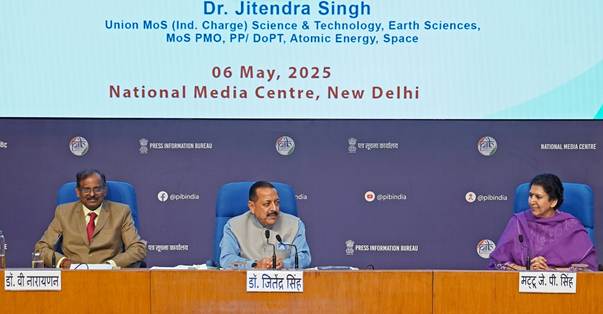
- 09 May 2025
In News:
India is set to host the 12th edition of the Global Space Exploration Conference (GLEX) 2025 from 7th to 9th May 2025 in New Delhi, marking a significant milestone in the nation's emergence as a key global player in space exploration.
Key Highlights of GLEX 2025:
- Theme: “Reaching New Worlds: A Space Exploration Renaissance”
- The conference theme underscores a renewed global commitment to innovation, inclusivity, and international collaboration in space science and technology.
- Organisers:
- International Astronautical Federation (IAF) – The world’s foremost space advocacy organisation.
- Indian Space Research Organisation (ISRO) – Serving as the primary host, reflecting India’s growing stature in the global space ecosystem.
- Astronautical Society of India (ASI) – Acting as the co-host and supporting India's role in global space diplomacy.
GLEX 2025 is expected to bring together global experts, policymakers, scientists, and industry leaders to discuss cutting-edge advancements, collaborative missions, and the future of space exploration. It will also highlight India's evolution from a regional space power to a central figure in the international space community.
About the International Astronautical Federation (IAF):
- Established: 1951
- Membership: Over 500 organisations from 78 countries, including major space agencies, private companies, academic institutions, and research bodies.
- Vision: “A space-faring world cooperating for the benefit of humanity”
- Motto: “Connecting @ll Space People”
- The IAF promotes global space cooperation and knowledge exchange. Through platforms like GLEX, it fosters dialogue on programmatic, technical, and policy aspects of space missions.
Significance for India:
GLEX 2025 reflects India’s growing prominence in the global space domain, reaffirming its commitment to peaceful space exploration and international collaboration. The event offers a valuable opportunity for India to showcase its achievements, build new partnerships, and contribute to shaping the future of global space policy and science.
GhassemBasir Missile unveiled by Iran
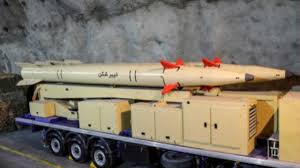
- 08 May 2025
In News:
Iran has recently introduced a new solid-fuel medium-range ballistic missile (MRBM) named GhassemBasir.
About the GhassemBasir Missile
The missile is designed to engage targets at distances exceeding 1,200 kilometers, enhancing Iran’s strategic strike capabilities.
Key Features:
- Size and Weight: The missile measures approximately 11 meters in length and weighs around 7 tons.
- Advanced Materials: Its airframe is reportedly constructed using carbon fiber composite materials, which reduce structural weight and lower its radar signature.
- Warhead: The missile carries a warhead estimated to weigh about 500 kilograms.
- Propulsion: Powered by a solid-fuel system, the missile benefits from quicker launch readiness and improved storage stability compared to liquid-fuel missiles.
- Speed: Capable of reaching speeds up to Mach 12.
- Guidance System: Equipped with a thermal imaging sensor that enables the missile to detect and home in on targets by sensing heat signatures during the final flight phase.
- Maneuverable Reentry Vehicle (MaRV): The missile features a MaRV that separates from the booster, reducing aerodynamic drag, decreasing radar detectability, and enhancing ballistic performance.
- Mobility: It can be launched from mobile transporter-erector-launchers (TELs), including vehicles resembling civilian trucks, increasing its operational flexibility and survivability.
Alcatraz Island
- 08 May 2025
In News:
The President of the United States has recently instructed his administration to undertake a project to rebuild and expand Alcatraz, the notorious prison that has been closed for over six decades. This historic site is located on a remote island off the coast of San Francisco, California.
About Alcatraz Island
Alcatraz Island, often referred to as “The Rock,” is a small rocky island situated in San Francisco Bay, California, covering approximately 22 acres (9 hectares).
Historical Overview
- 1849: The island was sold to the U.S. government.
- 1854: Alcatraz became home to the first lighthouse on California’s coast.
- 1859: The first permanent army troops were stationed on the island.
- 1861: Alcatraz was converted into a military prison.
- 1907: It was officially designated as the Pacific Branch of the U.S. Military Prison.
- 1933: The U.S. Army vacated the island.
- 1934–1963: Alcatraz functioned as a federal prison, housing some of America’s most dangerous criminals.
Prison Details
The prison had a capacity to hold over 330 inmates in cells measuring approximately 10 feet by 4.5 feet (3 meters by 1.5 meters). However, the actual number of prisoners rarely exceeded 260 at any given time. Known as the most secure and inescapable prison in the United States, Alcatraz was famous for its isolation and strict security measures. Although a few inmates attempted to escape, the harsh currents of San Francisco Bay made survival unlikely.
Closure and Current Status
Due to the high costs of upkeep, the prison was officially closed in March 1963. In 1972, Alcatraz was incorporated into the newly established Golden Gate National Recreation Area and was opened to the public. Today, it remains a popular tourist destination, attracting visitors from around the world.
Organization of Islamic Cooperation (OIC)
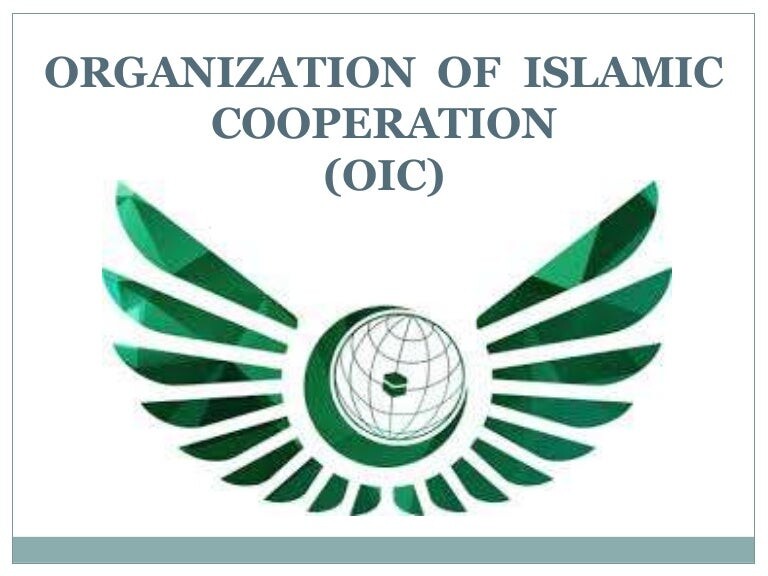
- 08 May 2025
About the OIC
The Organization of Islamic Cooperation (OIC) is the world’s second-largest intergovernmental organization after the United Nations, comprising 57 member states across four continents. It was established on September 25, 1969, following the historic summit held in Rabat, Morocco, which was convened in response to the arson attack on the Al-Aqsa Mosque in occupied Jerusalem.
Objectives and Purpose
The OIC’s primary goals are to:
- Preserve and promote Islamic values.
- Safeguard the national sovereignty and independence of its member states.
- Contribute to international peace and security.
- Serve as the collective voice of the Muslim world, protecting their interests across economic, social, and political spheres.
Structure and Headquarters
- The OIC’s headquarters is located in Jeddah, Saudi Arabia.
- Its official languages are Arabic, English, and French.
Membership
Notable member countries include Afghanistan, Bahrain, Bangladesh, Egypt, Indonesia, Iran, Iraq, Jordan, Kuwait, Lebanon, Libya, Malaysia, Maldives, Morocco, Niger, Oman, Pakistan, the Palestinian Authority, Qatar, Saudi Arabia, Sudan, Turkey, Uganda, United Arab Emirates, and Yemen, among others.
Principal Organs of the OIC
- Islamic Summit Conference (ISC):The highest authority of the OIC, meeting every three years to set the organization’s policies and strategic direction.
- Council of Foreign Ministers (CFM):Convening annually, the CFM reviews and oversees the implementation of decisions made by the Islamic Summit.
- General Secretariat:The executive branch responsible for executing the resolutions of the ISC and CFM.
Additionally, the OIC has established various ministerial-level committees—some chaired by heads of state—to coordinate cooperation among member countries in political, economic, cultural, social, spiritual, and scientific fields.
Partnerships and Global Engagement
The OIC collaborates closely with international organizations, including all specialized agencies of the United Nations, as well as governments and civil society organizations (CSOs). These partnerships help address concerns affecting its member states and the global Muslim community.
INS Sharda
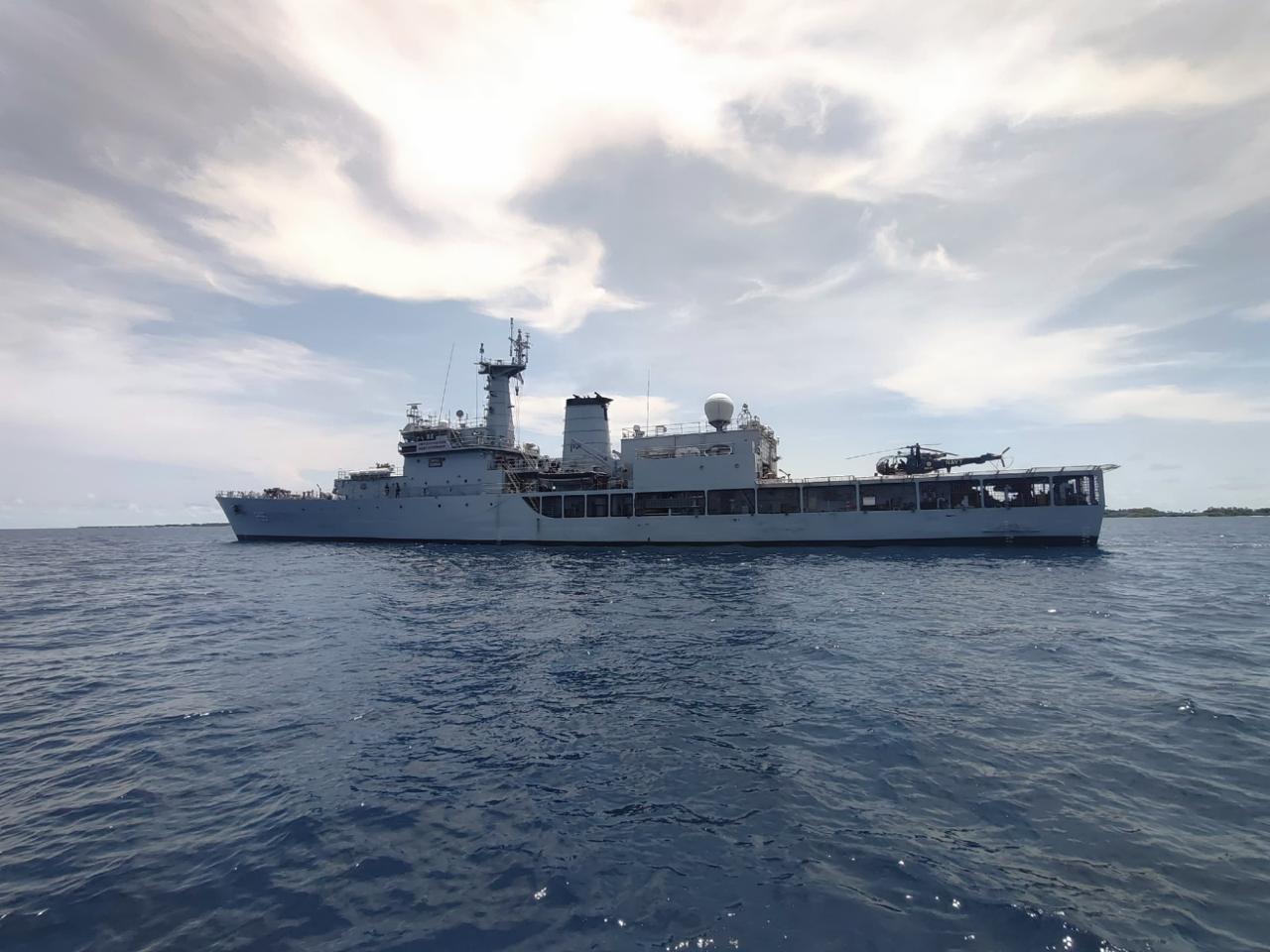
- 08 May 2025
In News:
The Indian Navy’s offshore patrol vessel, INS Sharda, has reached Maafilaafushi Atoll in the Maldives to participate in its first-ever Humanitarian Assistance and Disaster Relief (HADR) exercise, scheduled from May 4 to May 10, 2025.
Strengthening Regional Maritime Cooperation and Disaster Preparedness
This exercise is a key part of India’s strategic efforts to enhance regional maritime cooperation and bolster disaster readiness within the Indian Ocean Region (IOR). It underscores India’s steadfast commitment to its “Neighbourhood First” Policy, which recognizes the Maldives as a close maritime neighbour with deep strategic and cultural ties.
Aligning with the MAHASAGAR Vision
The HADR exercise supports the recently unveiled MAHASAGAR vision—Mutual and Holistic Advancement for Security and Growth Across Regions—introduced by the Prime Minister during the Mauritius visit. MAHASAGAR reaffirms India’s role as a net security provider and first responder in the Indian Ocean, building on the earlier SAGAR doctrine (Security and Growth for All in the Region). Both frameworks emphasize inclusive security, regional cooperation, and disaster resilience.
Objectives of the HADR Exercise
According to the Indian Navy, the exercise aims to:
- Enhance interoperability between the Indian Navy and the Maldives National Defence Force (MNDF).
- Conduct joint drills focusing on Search and Rescue (SAR), disaster response coordination, logistical support, and medical aid.
- Facilitate training programs for capacity building among personnel.
- Engage with local communities to raise awareness and strengthen disaster preparedness.
This maiden HADR exercise by INS Sharda marks a significant step toward deepening India-Maldives maritime collaboration and regional disaster management capabilities.
Metal-Free Catalyst for Hydrogen Fuel Production
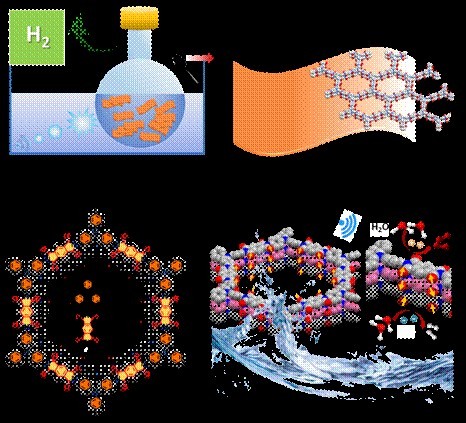
- 08 May 2025
In News:
In a significant breakthrough for clean energy technology, Indian scientists have engineered a metal-free catalyst capable of generating hydrogen fuel by harnessing mechanical energy. This innovation marks a major step forward in sustainable hydrogen production, aligning closely with India’s National Green Hydrogen Mission and its goal to lead in green energy solutions.
What is the Metal-Free Catalyst?
The catalyst is a specially designed donor-acceptor covalent organic framework (COF) that functions as a piezocatalyst without relying on any metal components. It can efficiently split water molecules to produce hydrogen gas (H?) when subjected to mechanical forces such as vibrations or pressure.
Development and Collaboration
This pioneering catalyst was developed at the Jawaharlal Nehru Centre for Advanced Scientific Research (JNCASR) in Bengaluru, under the leadership of Professor Tapas K. Maji. The project was carried out in collaboration with the Indian Institute of Science Education and Research (IISER) Pune and Wroc?aw University of Science and Technology in Poland.
Key Features of the Catalyst
- Metal-Free Composition: Made entirely from organic molecules, specifically TAPA (donor) and PDA (acceptor), connected through stable imide bonds.
- Ferrielectric Ordering (FiE): This internal property creates strong electric fields within the material, driving the catalytic water-splitting process.
- Porous, Sponge-like Structure: Enhances water permeability and promotes efficient separation of charges generated during the reaction.
- Mechanically Activated: The catalyst produces electron-hole pairs when exposed to mechanical pressure, enabling effective hydrogen generation.
Significance and Impact
- Environmentally Friendly: Eliminates the need for expensive and potentially harmful metal-based catalysts by using sustainable organic materials.
- Energy-Efficient: Utilizes ambient mechanical energy sources, such as vibrations or applied pressure, to power hydrogen production.
- Supports India’s Clean Energy Goals: Advances the objectives of the National Green Hydrogen Mission, strengthening India’s position in global clean energy innovation and reducing dependence on fossil fuels.
- Scalable and Cost-Effective: Offers a practical and affordable alternative to conventional metal-based hydrogen production technologies, making it suitable for widespread adoption.
India to Receive INS Tamal
- 07 May 2025
In News:
India is set to induct INS Tamal, the second advanced stealth frigate of the Krivak-III class, built in Russia under a bilateral defence contract.
About INS Tamal
- Type & Class:INS Tamal is a 3,900-tonne stealth frigate, part of the Krivak-III class deal signed in 2016 between India and Russia. It is the sister ship of INS Tushil, commissioned in December 2024.
- Builder & Collaboration:Constructed at the Yantar Shipyard in Kaliningrad, Russia, under India-Russia defence cooperation.
The contract includes four frigates: two built in Russia and two under construction at Goa Shipyard with technology transfer.
Key Features
- Stealth Technology:Equipped with advanced suppression systems for radio, infrared, and acoustic signatures to enhance survivability.
- Armaments:
- BrahMos supersonic cruise missiles (range approx. 450 km)
- Shtil surface-to-air missiles
- Anti-submarine torpedoes and rocket launchers
- Performance:
- Speed exceeding 30 knots
- Can deploy Kamov-28 and Kamov-31 helicopters for anti-submarine warfare and airborne early warning.
- Automation: High automation reduces crew workload and improves operational efficiency.
Strategic Importance
- Enhances India’s blue-water naval capabilities across air, surface, underwater, and electromagnetic domains.
- Strengthens naval deterrence and force projection in the Indo-Pacific region, especially amid rising tensions in the Arabian Sea.
- Demonstrates successful Make in India initiative combined with global collaboration, as two of the frigates are being built domestically at Goa Shipyard.
Rare 7th-Century Old Kannada Inscription unearthed at Madapura Lake, Karnataka
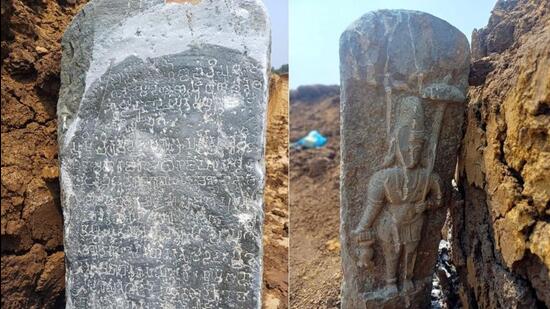
- 07 May 2025
In News:
A rare 7th-century Old Kannada inscription from the reign of Vikramaditya I of the Badami Chalukyas has been discovered at Madapura Lake in Davangere, Karnataka. The inscription sheds light on taxation, land grants, and regional governance during his rule.
About the Badami Chalukyas
- Origins: Emerged as a regional Kannada power claiming descent from Ayodhya to establish legitimacy.
- Capital:Vatapi (present-day Badami, Karnataka).
- Notable Rulers and Political History:
- Pulakesin I (543–566 CE): Founder of the dynasty; fortified Badami.
- Pulakesin II (609–642 CE): Most celebrated ruler; defeated Harshavardhana at the Narmada river; established diplomatic contacts with Persia (depicted in Ajanta caves).
- Vikramaditya I (644–681 CE): Son of Pulakesin II; reclaimed Badami from Pallavas and expanded influence over southern kingdoms like the Cholas, Pandyas, and Keralas.
- Administration:
- Centralised monarchy with limited autonomy granted to villages.
- Economy relied on land revenue and military conquests.
- Maintained a naval fleet—Pulakesin II had around 100 ships.
- Religion:Patronised Shaivism, Vaishnavism, Shaktism, and Jainism. Vikramaditya I and others made donations to Jain institutions; Pulakesin I performed Ashvamedha Yajna.
- Art and Architecture:
- Developed the Vesara style, a fusion of northern Nagara and southern Dravida temple architecture.
- Constructed rock-cut and structural temples in Aihole, Badami, and Pattadakal.
About Vikramaditya I
- Background: Son of Pulakesin II; ascended the throne during a period of political turmoil following his father's death and Pallava invasion.
- Military Achievements:
- Defeated Narasimhavarman I of the Pallavas, who had earlier seized Badami.
- Reunited the fractured Chalukya empire, restoring its former prestige.
- Subdued southern powers including the Cholas, Pandyas, and Keralas, consolidating control over the southern Deccan.
- Political Consolidation:
- Re-established central authority across Karnataka and surrounding regions.
- Appointed loyal feudatories, such as Singhavenna (mentioned in the new Davangere inscription), to manage local governance.
- Legacy:
- Known by titles such as Rajamalla (King of Kings) and Yuddhamalla (Warrior King).
- His reign marked a revival of Chalukya power and paved the way for cultural and architectural achievements under his successors Vikramaditya II and Kirtivarman II.
India-Angola Bilateral Talks and Strategic Cooperation
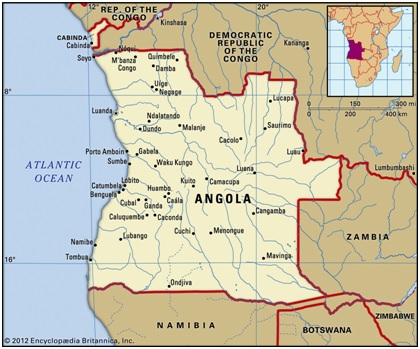
- 07 May 2025
In News:
The Prime Minister of India recently held bilateral talks with Angolan President João Lourenço in New Delhi. During the meeting, India offered Angola a $200 million defence credit line and discussed expanding cooperation in sectors such as infrastructure, defence, and space technology. The visit also commemorates the 40th anniversary of diplomatic relations between India and Angola.
About Angola
- Location: Southwestern Africa, bordered by the Atlantic Ocean to the west.
- Capital: Luanda, a major coastal port city.
- Neighbouring countries: Republic of the Congo, Democratic Republic of the Congo, Zambia, Namibia, and the Atlantic Ocean.
- Special territory: Includes the exclave of Cabinda, located north of the main territory.
Geographical Features
- Major Plateaus:Bié Plateau (~2,600 m), Huíla Plateau (~2,300 m), Malanje Highlands.
- Highest Point: Mount Moco (2,620 m or 8,596 ft) near Huambo.
- Rivers:
- Cuanza (Kwanza): Largest river entirely within Angola.
- Cunene River: Forms part of the border with Namibia.
- Cuango River: Tributary of the Congo River.
- Other rivers drain into the Zambezi and Okavango river systems.
- Desert: Southwest Angola forms part of the Namib Desert.
- Climate: Tropical with distinct rainy and dry seasons, influenced by the cold Benguela ocean current.
Demographics and Economy
- Ethnic groups: Predominantly Bantu-speaking, including Ovimbundu, Kimbundu, and Bakongo communities.
- Economic importance:
- One of Africa’s leading oil producers.
- Rich mineral resources including diamonds, iron ore, copper, and gold.
- The northeast is notable for diamond deposits found in river gravels.
ECINET: India’s Unified Digital Platform for Elections
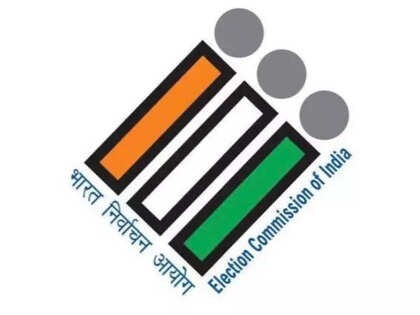
- 07 May 2025
In News:
The Election Commission of India (ECI) is set to launch ECINET, a single, unified digital platform aimed at consolidating and simplifying election-related services for voters, officials, political parties, and civil society organizations.
About ECINET:
ECINET will merge over 40 existing mobile and web applications—including the Voter Helpline, cVIGIL, Suvidha 2.0, ESMS, Saksham, KYC App, Voter Turnout app, Know Your Candidate app, and election results app—into one integrated system. This platform will also serve election officials such as Electoral Registration Officers and Booth Level Officers by providing a comprehensive interface.
Objectives:
- Simplify access to electoral services through a single window and one login (single sign-on).
- Eliminate the redundancy of multiple applications and multiple logins.
- Provide real-time access to verified and authenticated election data for all stakeholders.
- Strengthen electoral infrastructure by fostering digital innovation and integration.
- Enhance cybersecurity through robust testing and protocols.
Key Features:
- Unified Platform: Consolidates all election-related apps into one.
- Single Sign-On: One login credential for all services reduces confusion.
- Cross-Device Compatibility: Accessible on smartphones and desktops alike.
- Modern User Interface: Intuitive and user-friendly design.
- Data Integrity: Only authorized ECI officials can enter data, with statutory forms prevailing in case of discrepancies.
- Robust Cybersecurity: Rigorous trials to ensure safety and performance.
- Nationwide Coverage: Designed to serve nearly 100 crore voters and the entire electoral administration.
Timeline:
The ECINET platform is in advanced stages of development and testing and is expected to be launched before the Bihar Assembly elections later this year.
Stratospheric Airship Platform by DRDO
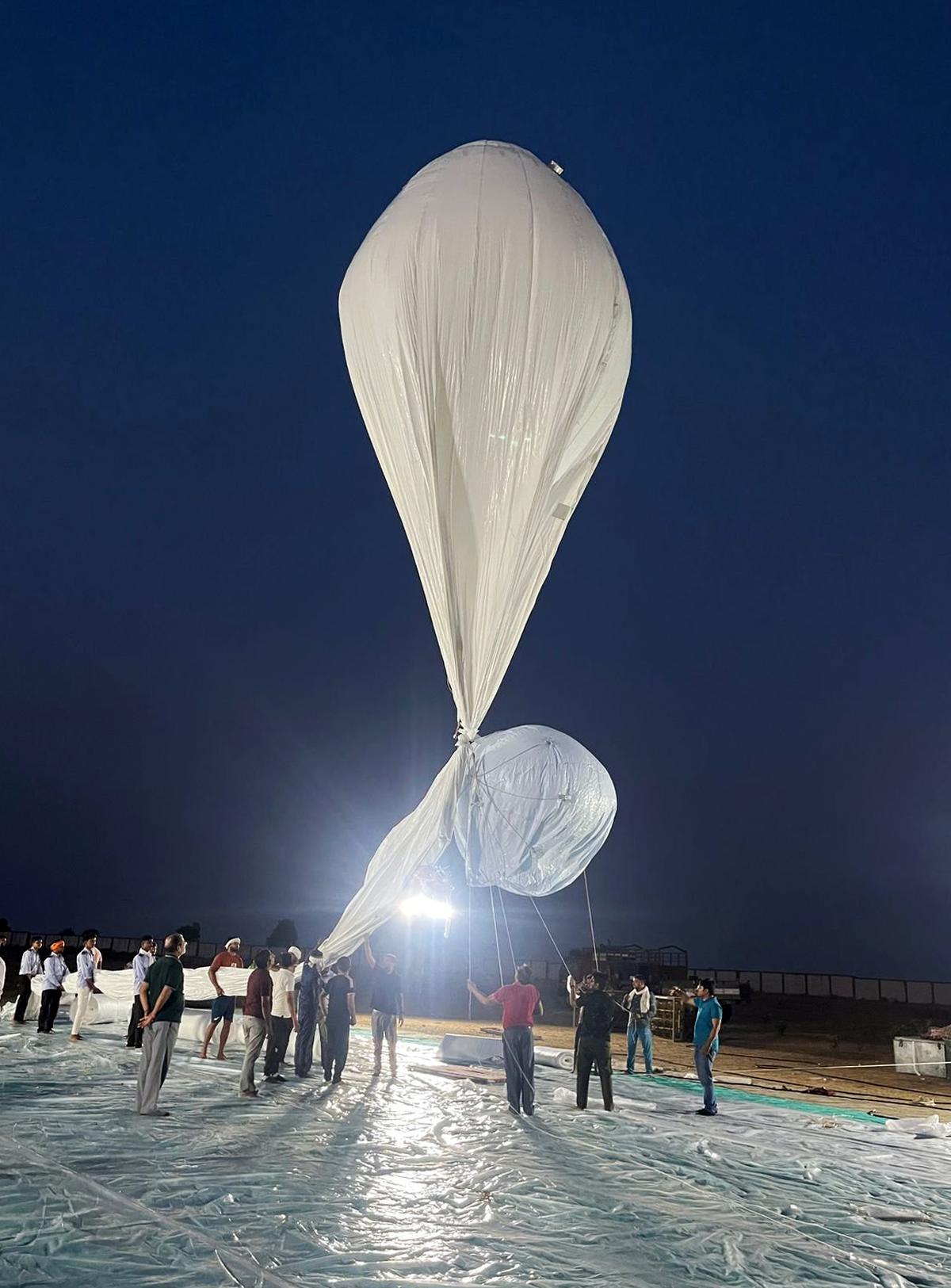
- 07 May 2025
In News:
India successfully conducted the maiden flight trial of its indigenous Stratospheric Airship Platform, developed by the Defence Research and Development Organisation (DRDO). The trial took place at Sheopur, Madhya Pradesh, and marked a significant milestone in India’s pursuit of advanced high-altitude surveillance technologies.
About the Stratospheric Airship Platform
- Nature: A lighter-than-air, high-altitude airship designed to operate at stratospheric heights (~17 km altitude).
- Developer: Aerial Delivery Research and Development Establishment (ADRDE), Agra under DRDO.
- Purpose: To provide extended surveillance and real-time observation capabilities for military and civilian applications.
Key Features and Flight Trial Details
- Successfully reached an altitude of about 17 km (stratosphere).
- Carried an instrumental payload for Intelligence, Surveillance, and Reconnaissance (ISR) tasks.
- Flight duration: Approximately 62 minutes.
- Tested crucial systems such as envelope pressure control and emergency deflation mechanisms.
- Data from onboard sensors will aid in developing simulation models for future flights.
- The platform was recovered post-mission for further analysis.
Strategic and Operational Significance
- Enhanced ISR: Boosts India’s military surveillance over borders, coastal regions, and conflict zones.
- Earth Observation: Supports disaster management, environmental monitoring, and communication relays.
- Cost-Effective: Provides persistent coverage at a fraction of the cost of satellite launches.
- Technological Edge: Places India among a select group of nations with indigenous high-altitude airship capabilities, crucial amid rising regional security challenges.
- Dual-Use Potential: Suitable for both defence and civilian applications, including atmospheric sensing.
Khelo India Youth Games 2025
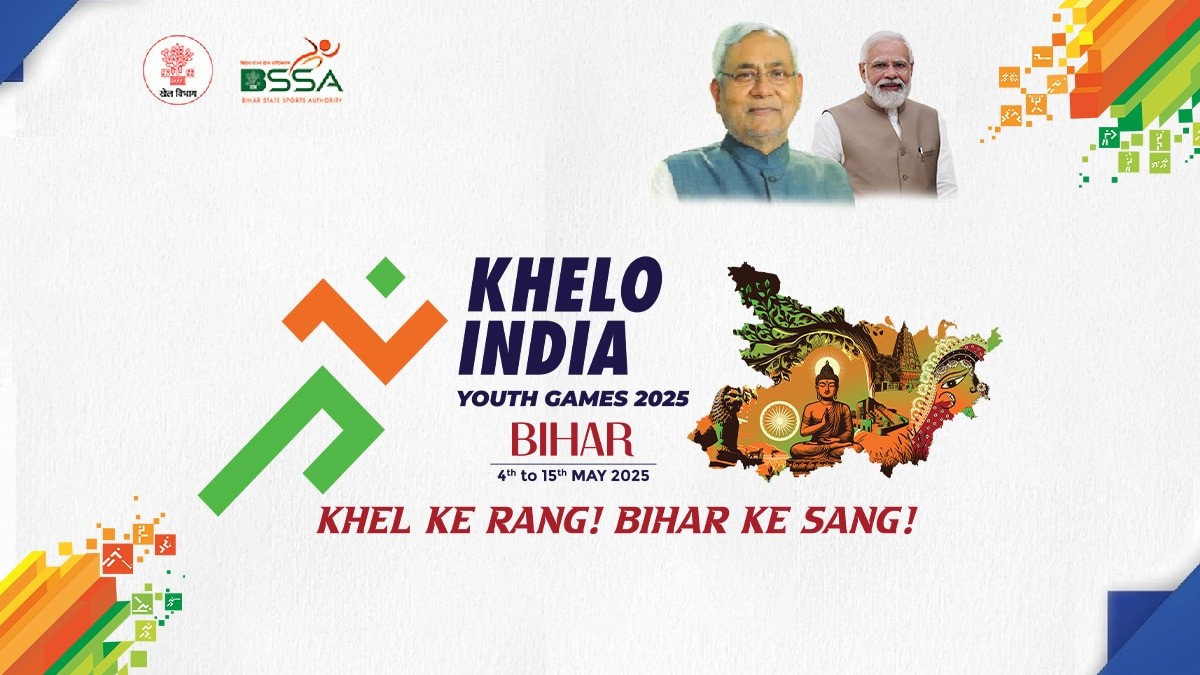
- 06 May 2025
In News:
- Prime Minister Narendra Modi virtually inaugurated the 7th edition of the Khelo India Youth Games (KIYG) on May 4, 2025, marking Bihar’s first time hosting a national-level multi-sport event.
- The event will be held across five cities in Bihar: Patna, Rajgir, Gaya, Bhagalpur, and Begusarai from May 4–15, 2025.
About Khelo India Youth Games (KIYG)
Feature Details
Launch Year 2018
Nodal Ministry Ministry of Youth Affairs and Sports
Target Group Youth athletes under 17 and 21 years of age
Objective Promote grassroots sports, mass participation, and talent
development for global competition
Host Cities in 2025 Patna, Rajgir, Gaya, Bhagalpur, Begusarai
Total Athletes (2025) Over 6,000 participants
Special Highlights of KIYG 2025
- Medal Events: Competitions held in 27 sporting disciplines.
- New Inclusions:
- Sepaktakraw included as a medal sport for the first time.
- Esports introduced as a demonstration event, reflecting the rise of digital-age sports.
- Support for Athletes: Winners eligible for scholarships under the Khelo India Scheme to pursue professional training.
Significance
- PM Modi emphasized the role of regular tournaments like KIYG in shaping India’s sports ecosystem.
- Cited Vaibhav Suryavanshi, a 14-year-old cricketer who scored a 38-ball century in IPL 2025, as a symbol of emerging youth talent.
- Highlighted that platforms like Khelo India events (youth, para, winter, and senior levels) help identify, nurture and promote talent, building confidence among young athletes.
Previous Editions of KIYG
Edition Host City
1st (2018) New Delhi
2nd (2019) Pune
3rd (2020) Guwahati
4th (2021) Panchkula
5th (2022) Bhopal
6th (2023) Chennai
7th (2025) Bihar (multiple cities)
DRR Dhan 100 (Kamala) &Pusa DST Rice 1
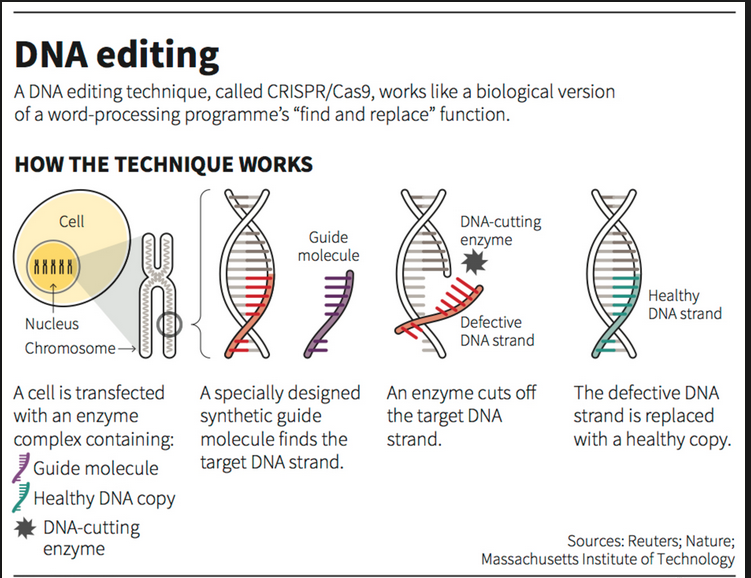
- 06 May 2025
In News:
- Recently, the Union Ministry of Agriculture and Farmers’ Welfare launched India’s first genome-edited rice varieties—DRR Dhan 100 (Kamala) and Pusa DST Rice 1.
- Developed by ICAR-IIRR (Hyderabad) and ICAR-IARI (New Delhi) using CRISPR-Cas9 technology under SDN1/SDN2 methods.
About the Varieties
DRR Dhan 100 (Kamala)
- Developed by: ICAR-Indian Institute of Rice Research (IIRR), Hyderabad
- Parent variety: Samba Mahsuri (BPT 5204)
- Features:
- 19% increase in yield
- Matures in ~130 days (20 days earlier than parent)
- Stronger stem – reduces lodging
- Saves ~7,500 million cubic meters of irrigation water
- Lower methane emissions
- Edited gene: CKX2 (Gn1a) – increases grain number per panicle
Pusa DST Rice 1
- Developed by: ICAR-Indian Agricultural Research Institute (IARI), New Delhi
- Parent variety: MTU 1010 (Cotton Dora Sannalu)
- Features:
- Improved tolerance to drought and salinity
- Yield increase: Up to 30.4% in saline/alkaline soils
- Edited gene: DST gene
- Developed using SDN1 genome editing – no foreign DNA inserted
Technology Used
- CRISPR-Cas9 genome editing system:
- Enables precise editing of native genes without inserting foreign DNA
- SDN1/SDN2 methods approved by India’s biosafety regulations
- Genome editing vs GMOs:
- Genome editing makes internal gene alterations
- GMOs involve insertion of foreign genetic material
- GM crops are banned for cultivation/import in India (except Bt cotton)
Benefits Claimed
- Increased agricultural productivity:
- 19% increase in yield (DRR Dhan 100)
- Up to 30.4% increase in saline soils (Pusa DST Rice 1)
- Environmental benefits:
- Reduced greenhouse gas emissions (~20%)
- Lower methane release due to early maturation
- Major water conservation
- Target states: Andhra Pradesh, Telangana, Tamil Nadu, Kerala, Karnataka, Chhattisgarh, Maharashtra, Madhya Pradesh, Odisha, Jharkhand, Bihar, Uttar Pradesh, West Bengal, and Puducherry
Concerns and Criticisms
Biosafety and Unintended Effects
- Unintended mutations: CRISPR-Cas enzymes may cause off-target gene edits, potentially resulting in unknown protein formations.
- Lack of global standardisation on enzyme concentration and specificity.
- Some scientists warn of genetic instability in SDN1-based edits.
Seed Sovereignty & Intellectual Property Rights (IPR)
- Genome editing tools are IPR-protected, raising concerns over farmers' seed sovereignty.
- Activist groups like Coalition for a GM-Free India demand transparency on IPR ownership and oppose reliance on proprietary technologies.
- Risk of monoculture, loss of rice genetic diversity, and trade barriers for India’s non-GM rice exports.
Policy and Regulatory Framework
- India’s biosafety guidelines (2022) permit SDN1 and SDN2 genome editing for general crops.
- The Union Budget 2023–24 allocated ?500 crore for advancing genome editing in agriculture.
- ICAR expanding genome editing to oilseeds and pulses.
Neanderthal Spear Tip Discovery
- 06 May 2025
In News:
Ancient bone spear tip found in Russia is oldest in Europe and made by Neanderthals.
What Was Discovered?
- Oldest known spear tip in Europe, crafted by Neanderthals, not Homo sapiens.
- Found in a cave in the North Caucasus region, Russia.
- Dated to 70,000–80,000 years ago, prior to modern human arrival in Europe (~45,000 years ago).
- Study published in the Journal of Archaeological Science.
Artefact Features
- Length: ~9 cm
- Material: Bone (likely from bison)
- Construction:
- Shaped using stone tools
- Attached to a wooden shaft with natural tar (early adhesive use)
- Function:
- Micro-cracks indicate impact with a hard target – used in hunting or combat
- Minimal wear, suggesting it was used shortly after construction
Excavation Details
- Excavated in 2003, thoroughly analyzed recently.
- Found with animal bones and campfire remains – evidence of Neanderthal habitation.
- Analytical techniques used: Spectroscopy, CT scans, Microscopy
Shear-Wave Splitting
- 06 May 2025
In News:
Scientists from the University of Oxford have proposed a new method to monitor volcanic eruptions by using the seismic phenomenon of shear-wave splitting, demonstrated at Mount Ontake in Japan.
What is Shear-Wave Splitting?
- Shear-wave splitting is a seismic phenomenon where shear (S) waves split into two components that travel at different speeds based on their polarisation.
- Occurs when waves pass through aligned cracks or fractures in subsurface rocks.
- Movement of magma and volcanic fluids changes stress conditions, causing rock cracks to open or close.
- These changes influence the speed and direction of shear waves.
- Increased shear-wave splitting can indicate rising internal pressure, serving as a potential early warning for volcanic eruptions.
Mount Ontake – Key Facts
- Type: Active stratovolcano
- Location: Honsh? Island, Central Japan, near Tokyo
- Status: Japan’s second-highest volcano
- Part of the Pacific Ring of Fire
- Major Eruption:
- Year: 2014
- Type: Phreatic eruption (steam-driven)
- Casualties: 60+ people, mainly hikers
- Notably occurred without significant seismic warning
- Phreatic Eruptions:
- Caused by steam pressure from heated underground water
- Do not involve new magma
- Difficult to predict using conventional methods
Pulsar G359 and Galactic ‘Bone’
- 06 May 2025
In News:
Astronomers have discovered a likely explanation for a fracture in a huge cosmic "bone" in the Milky Way galaxy, using NASA's Chandra X-ray Observatory and radio telescopes.
About G359.13-0.20005 ("The Snake")
- G359.13 is a non-thermal filament in the Milky Way, resembling a "galactic bone."
- It stretches about 230 light-years and is located ~26,000 light-years from Earth, near the Galactic Center.
- These filaments are visible primarily in radio waves and aligned with galactic magnetic field lines.
- Emissions result from charged particles spiraling along magnetic fields, producing synchrotron radiation.
Key Discovery
- A fracture has been observed in the continuous structure of G359.13.
- This fracture aligns with the location of a pulsar, identified using:
- Chandra X-ray Observatory (X-ray data)
- MeerKAT and VLA (radio data)
About the Pulsar
- A highly magnetized, fast-moving neutron star formed by a supernova explosion.
- Estimated speed: 1–2 million miles per hour.
- The pulsar likely collided with G359.13, causing:
- Distortion in the magnetic field
- Fracture in the radio filament
- Chandra data revealed blue-colored X-ray emissions from the pulsar.
- Nearby X-ray sources may be from electrons and positrons accelerated to high energies.
Scientific Significance
- Provides insights into:
- High-energy astrophysical processes
- Pulsar interactions with galactic magnetic structures
Chandra X-ray Observatory – Key Facts
- Launched: July 23, 1999, aboard Space Shuttle Columbia (STS-93)
- Function: Detects X-ray emissions from hot cosmic objects (e.g., black holes, supernova remnants)
- Orbit: High Earth orbit (~139,000 km altitude) to avoid atmospheric X-ray absorption
- Part of NASA’s “Great Observatories” (with Hubble, Spitzer, Compton)
- Capabilities:
- 8x better resolution than previous X-ray missions
- Detects X-ray sources 20 times fainter than predecessors
- Managed by: NASA’s Marshall Space Flight Center
Orange Economy
- 05 May 2025
In News:
At the World Audio Visual Entertainment Summit (WAVES) held in Mumbai, Prime Minister Narendra Modi highlighted the transformative potential of India's Orange Economy—a sector driven by creativity, content, and culture. With Indian films now screened in over 100 countries and a surge in OTT platform consumption, India is fast emerging as a global content leader.
What is the Orange Economy?
Also known as the Creative Economy, the Orange Economy encompasses industries rooted in individual creativity, talent, and intellectual property. Coined by Colombian economists Felipe Buitrago and Iván Duque, the term “orange” reflects the vibrancy of cultural identity and innovation.
Core Sectors:
- Advertising, architecture, and design
- Arts and crafts, fashion, and publishing
- Film, music, performing arts, and photography
- Animation, gaming, software, and digital media
- Television, radio, and electronic publishing
- Research and development (R&D)
Key Features of the Orange Economy
- Knowledge-driven and innovation-centric
- Promotes cultural diversity and economic inclusivity
- Combines economic, social, and cultural dimensions
- Strong links to technology, tourism, and intellectual property rights
Global and National Significance
- As per UNESCO, the Orange Economy contributes approximately 3% to global GDP and supports over 30 million jobs worldwide.
- The global animation industry alone is valued at $430 billion.
- In India, the creative sector is being nurtured through flagship initiatives like Skill India, Startup India, and platforms such as WAVES, aiming to empower young creators—from Guwahati musicians to Kochi podcasters.
Government Support and Vision
Emphasized that though the "screen may be shrinking, the scope is infinite," underlining the massive potential of digital platforms and content innovation. The government is actively working to build an enabling ecosystem for the creative economy, blending economic growth with cultural preservation.
Vizhinjam International Seaport
- 05 May 2025
In News:
The Vizhinjam International Seaport in Kerala is set to be inaugurated by the Prime Minister, marking a significant milestone in India’s maritime infrastructure.
Key Highlights
- Location: Situated at Vizhinjam, near Thiruvananthapuram in Kerala.
- Type: India’s first dedicated transshipment port and semi-automated seaport.
- Development Model: Built under the Public-Private Partnership (PPP) model at an estimated cost of ?8,900 crore. The port is operated by the Adani Group, while the Kerala Government retains majority ownership.
Technical Features
- Deepest Breakwater in India: Spanning about 3 km with a natural depth of ~20 metres, enabling accommodation of large container vessels.
- Minimal Littoral Drift: Reduced sediment movement along the coast helps lower maintenance costs significantly.
- AI-Powered Vessel Traffic Management: India’s first indigenous VTMS system developed in collaboration with IIT Madras.
- Advanced Automation:
- Fully automated yard cranes.
- Remotely operated ship-to-shore cranes for efficient and safe cargo handling.
Strategic Importance
- Proximity to Global Shipping Lanes: Located just 10 nautical miles from a key international East-West shipping route.
- Boost to Domestic Transshipment:
- Currently, around 75% of India’s transshipment traffic is handled by foreign ports such as Colombo and Singapore.
- Vizhinjam is expected to reduce foreign exchange outflows and increase India's share in global maritime trade.
- International Connectivity: The port is now connected to global maritime hubs like Shanghai, Singapore, and Busan.
Future Prospects
- Multi-Modal Integration:
- Direct linkage to National Highway-66 (NH-66).
- Kerala’s first cloverleaf interchange for seamless traffic movement.
- An upcoming railway link to integrate the port with the national railway grid.
- Vision: Aims to become a major multi-modal logistics hub supporting India’s broader maritime and trade ambitions under Sagarmala and PM Gati Shakti initiatives.
Annual Survey of Services Sector Enterprises (ASSSE)
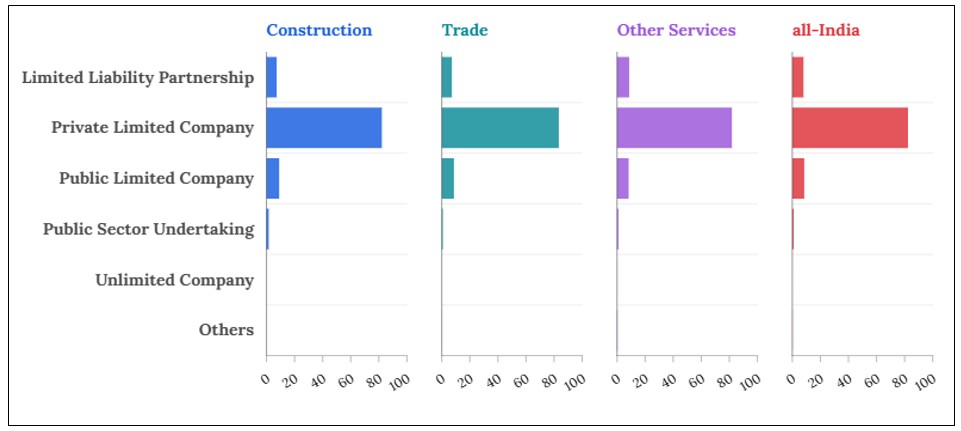
- 05 May 2025
In News:
The Ministry of Statistics and Programme Implementation (MoSPI) recently released findings from a pilot study on the Annual Survey of Services Sector Enterprises (ASSSE). This initiative aims to fill a crucial data gap regarding India’s incorporated service sector, which is not currently covered by regular surveys like the Annual Survey of Unincorporated Sector Enterprises (ASUSE).
Significance of the Services Sector
- Contribution to Economy: The services sector contributed ~55% of India's Gross Value Added (GVA) in FY 2024–25, up from 50.6% in FY14.
- Employment: It employs around 30% of India’s workforce, spanning industries like IT, finance, education, tourism, and healthcare.
- Trade: India’s services exports stood at USD 280.94 billion (April–Dec 2024). In ICT services, India is the 2nd-largest global exporter, accounting for 10.2% of global exports.
- FDI Magnet: The sector attracted USD 116.72 billion in FDI (April 2000–Dec 2024)—about 16% of total FDI inflows.
- Support to Digital India & Urbanization: The sector underpins the Digital India initiative and Smart Cities Mission by enabling digital payments, urban mobility, e-governance, and waste management.
About the ASSSE Pilot Study
Purpose & Objectives
- To test the suitability of the GSTN (Goods and Services Tax Network) database as a sampling frame.
- To develop robust survey instruments and methodology for a full-scale annual survey starting January 2026.
- To gather data on economic characteristics, employment, and financial indicators from incorporated enterprises under:
- Companies Act, 1956/2013
- Limited Liability Partnership (LLP) Act, 2008
Survey Coverage
- Conducted in two phases:
- Phase I (May–Aug 2024): Verified enterprise data for 10,005 units.
- Phase II (Nov 2024–Jan 2025): Collected detailed data from 5,020 enterprises under the Collection of Statistics Act, 2008.
- Data collected for FY 2022–23 using CAPI (Computer-Assisted Personal Interviewing).
Key Findings:
Enterprise Type Distribution
- Private Limited Companies: 82.4%
- Public Limited Companies and LLPs: ~8% each
Size-Class Analysis (FY 2022–23)
Output Class (?) % Share of Gross Value Added (GVA) % Share of Fixed Assets % Share of Employment
< 10 crore 1.19% 2.64% 9.28%
10–100 crore 9.45% 9.58% 20.03%
100–500 crore 19.90% 25.00% 33.73%
> 500 crore 69.47% 62.77% 36.96%
- Large enterprises (output > ?500 crore) dominate in assets, value addition, and compensation paid, but smaller units employ over 63% of the total workforce in the sample.
Additional Establishments
- 28.5% of enterprises reported having additional business locations within the state.
- Highest in the Trade sector (41.8%).
Insights and Challenges from the Pilot
- Suitability of GSTN as Sampling Frame: Confirmed.
- Challenges Faced:
- Data retrieval from enterprises with headquarters in other states.
- Centralized data (CIN-based) posed difficulty in disaggregating state-level data.
- Positive Outcomes:
- High response rate and cooperation.
- Survey instruments found largely clear and functional.
Challenges Faced by the Services Sector
- Skill Gaps:
- Only 51.25% of youth are employable (Economic Survey 2023–24).
- Merely 5% of workforce is formally skilled (WEF).
- Informality:
- About 78% of service jobs were informal in 2017–18.
- Gig workers lack social protection.
- Global Competition:
- Visa restrictions (e.g., H-1B in the US).
- Competing hubs: Philippines, Vietnam.
- Rising IT wage costs in India.
- Infrastructure Deficiencies:
- Inadequate AI/ML adoption.
- Digital divide persists in rural and marginalized MSMEs.
- Post-COVID Recovery:
- Inbound tourism yet to reach pre-pandemic levels (90% of 2019 arrivals in H1 2024).
Way Forward
- Upskilling Initiatives:
- Expand Skill India Digital and PMKVY 4.0.
- Promote Prime Minister Internship Scheme (PMIS) for bridging academia-industry gap.
- Boosting Global Competitiveness:
- Negotiate FTAs with EU, UK, Australia.
- Expand Global Capability Centres (GCCs).
- Digital Infrastructure & Security:
- Strengthen cybersecurity frameworks and promote secure cloud adoption.
- Improve digital literacy, especially in financial services.
- Decentralized Growth:As per NITI Aayog, promote services sector in Tier-2 and Tier-3 cities with better infrastructure and connectivity.
Global Wind Energy Report 2025
- 05 May 2025
In News:
The Global Wind Energy Council (GWEC), in its Global Wind Report 2025, has warned that current global wind energy growth is insufficient to meet the targets aligned with the Paris Agreement and net-zero emissions by 2050. As per the report, at current trends, only 77% of the wind capacity required by 2030 will be achieved — putting the 1.5°C global warming limit at serious risk.
Global Wind Energy Landscape (as of 2024)
- New Capacity Added: 117 GW (up from 116.6 GW in 2023)
- Total Global Capacity: 1,136 GW
- Leading Countries:
- China: 70% of new installations
- USA, Brazil, India, and Germany followed.
- Emerging Markets: Uzbekistan, Egypt, and Saudi Arabia showed significant growth.
- Regional Progress:
- Africa and Middle East: Onshore wind capacity doubled compared to previous years.
- Offshore Wind: Only 8 GW added (down 26% from 2023), the lowest since 2021.
Key Challenges Identified by GWEC
- Policy Uncertainty: Regulatory delays and instability in key markets.
- Grid Infrastructure Deficits: Underinvestment in transmission and distribution systems.
- Financial Constraints: Inflation, high interest rates, trade protectionism.
- Market Inefficiencies: Weak renewable energy auction systems.
Global Commitments & Urgency
- At COP28 (Dubai), countries pledged to triple renewable energy capacity by 2030.
- To align with this goal, annual wind installations must rise to 320 GW by 2030.
- Failure to scale up urgently risks missing a vital climate mitigation window.
Wind Energy in India – Status and Prospects (as of March 2025)
- Total Installed Capacity: 50.04 GW
- Capacity Added (FY 2024–25): 4.15 GW
- (Up from 3.25 GW in FY 2023–24)
- Global Rank: 4th largest wind power producer (after China, USA, Germany)
- Top States:
- Gujarat
- Tamil Nadu
- Karnataka
- Manufacturing Strength: Domestic wind turbine manufacturing capacity is ~18,000 MW/year.
- Offshore Wind Potential:
- Gujarat: 36 GW
- Tamil Nadu: 35 GW
Exercise DUSTLIK
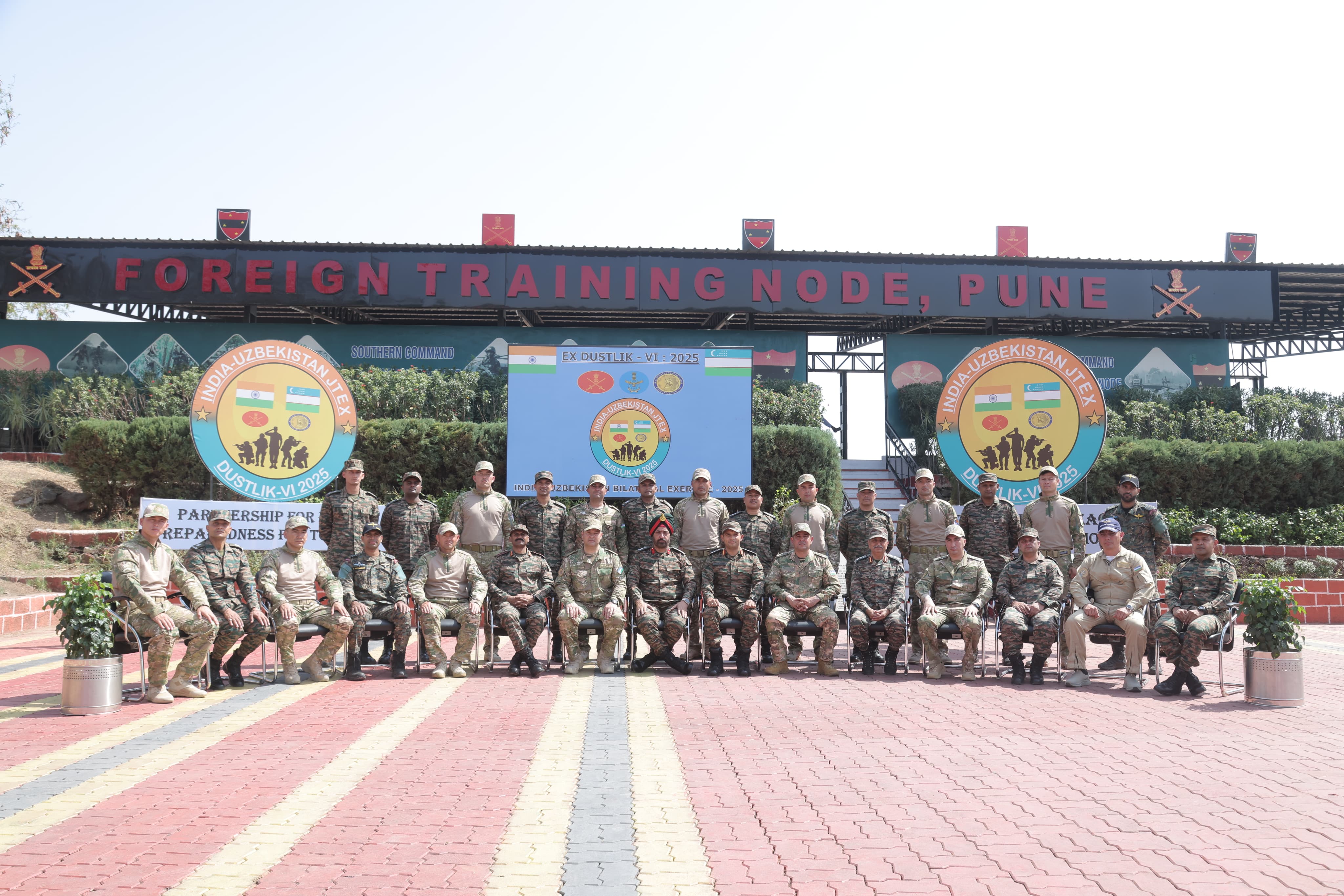
- 05 May 2025
In News:
The 6th edition of Exercise DUSTLIK, a bilateral joint military exercise between India and Uzbekistan, was recently held at the Foreign Training Node in Aundh, Pune. The previous edition (2024) was conducted in Termez, Uzbekistan.
Key Highlights:
- Exercise Theme: Joint Multi-Domain Sub-Conventional Operations in Semi-Urban Terrain.
- Aimed at simulating counter-terrorism operations, especially in scenarios involving territorial capture by terrorist groups.
- Indian contingent: 60 personnel from the JAT Regiment and the Indian Air Force (IAF).
- Uzbek contingent: Personnel from the Uzbekistan Army.
Core Activities:
- Establishment of a Joint Operations Centre at the battalion level.
- Execution of population control, raids, search-and-destroy operations.
- Use of air assets: drones, helicopters for reconnaissance, Special Heliborne Operations (SHBO), Small Team Insertion and Extraction (STIE).
- Focus on counter-UAS (unmanned aerial systems) measures and logistics support in hostile conditions.
Objectives:
- Enhance interoperability, tactical coordination, and operational synergy between the two armies.
- Promote defence cooperation and strengthen bilateral relations between India and Uzbekistan.
- Exchange of best practices in conducting joint sub-conventional operations.
About Uzbekistan:
- Doubly landlocked country in Central Asia, located between the Syr Darya and Amu Darya rivers.
- Borders: Kazakhstan, Kyrgyzstan, Tajikistan, Afghanistan, and Turkmenistan.
Operation Hawk 2025
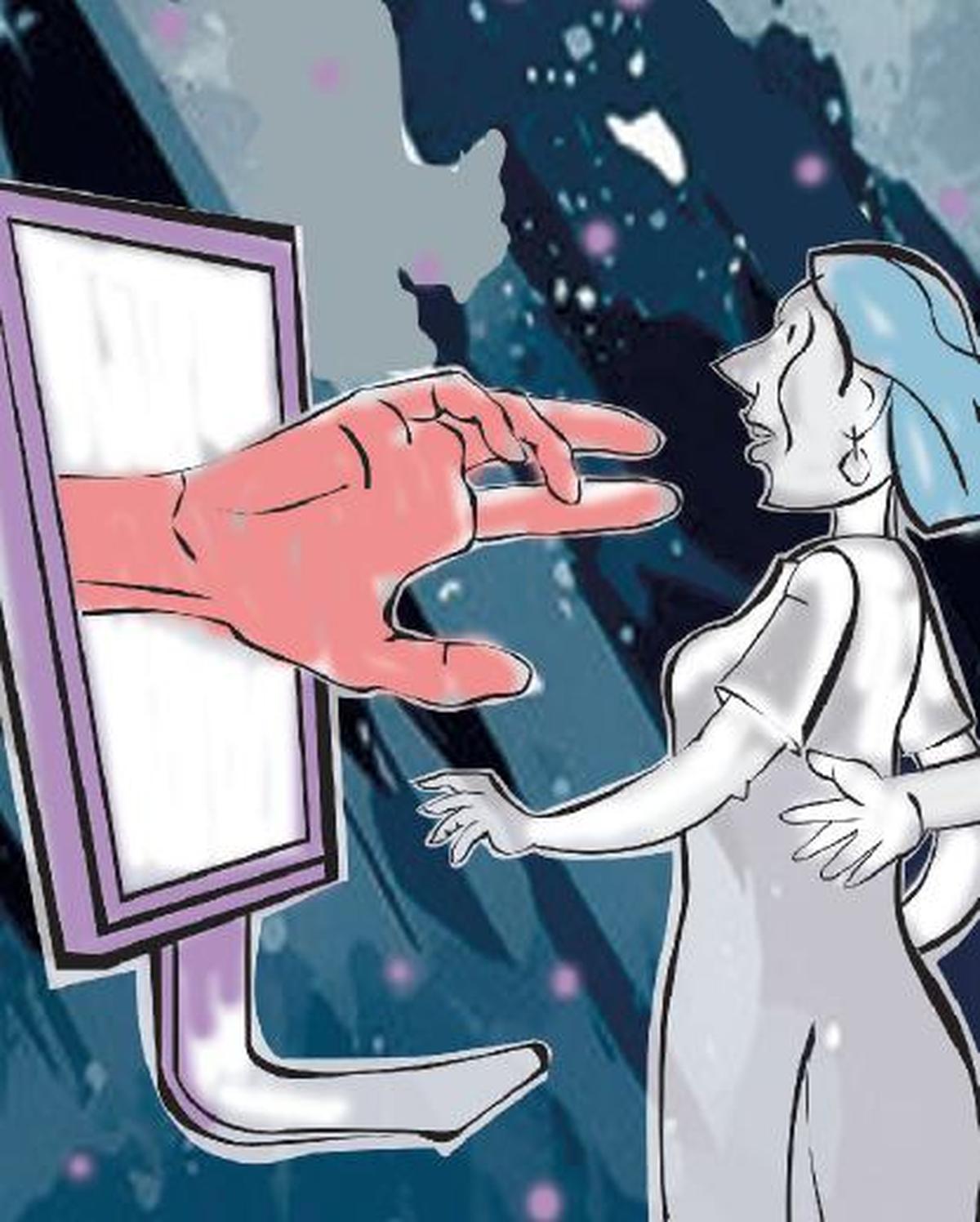
- 04 May 2025
In News:
The Central Bureau of Investigation (CBI) has launched Operation Hawk in 2025 to combat international cybercrime networks involved in online child sexual exploitation (OCSE). The operation led to arrests in Delhi and Mumbai, following inputs from foreign agencies including the United States.
About Operation Hawk
Feature Details
Launched By CBI’s International Operations Division
Year of Launch 2025
Main Objective Target and dismantle cybercriminal networks engaged in OCSE
Scope International cooperation, digital forensics, and prosecution
Key Objectives
- Disrupt organized cyber-pedophile networks.
- Enhance coordination with agencies like Interpol, FBI, and foreign governments.
- Strengthen legal action under IPC, IT Act, and POCSO Act.
- Address complaints involving Indian nationals from foreign jurisdictions.
- Boost cross-border digital evidence collection and swift response systems.
Previous Related Operations
- Operation CARBON (2021):Targeted dark web CSAM (Child Sexual Abuse Material) users globally.
- Operation MEGH CHAKRA (2022):Pan-India action based on Interpol alerts; resulted in large-scale arrests and digital data seizures.
India’s First Inter-State Cheetah Conservation Corridor
- 04 May 2025
In News:
Rajasthan has joined hands with Madhya Pradesh to develop India’s first inter-state cheetah conservation corridor, a landmark initiative under the Cheetah Reintroduction Project. The corridor will facilitate the safe movement of cheetahs across a 17,000 sq. km protected landscape, enhancing conservation and habitat connectivity.
Key Features of the Cheetah Conservation Corridor
Aspect Details
Total Area 17,000 sq. km (MP: 10,500 sq. km; Rajasthan: 6,500 sq. km)
States Involved Madhya Pradesh and Rajasthan
Supported by National Tiger Conservation Authority (NTCA), Wildlife Institute of India (WII)
MoU Status In progress between Chief Ministers of MP and Rajasthan
Geographical Scope and Key Sites
- PalpurKuno National Park (MP):Core site for cheetah reintroduction; located in Sheopur district.
- Gandhi Sagar Sanctuary (MP):Being developed as a second habitat for cheetahs; located in Mandsaur district along the Chambal River.
- Mukundara Hills Tiger Reserve (Rajasthan):Proposed extension site; comprises parts of Darrah, Jawahar Sagar, and Chambal sanctuaries in Kota division.
- Rajasthan Districts Involved:Kota, Bundi, Baran, Jhalawar, Sawai Madhopur, Karauli, Chittorgarh
- Proposed Future Expansion:Forest regions of Jhansi and Lalitpur in Uttar Pradesh
Objectives and Benefits
- Inter-State Wildlife Connectivity:India’s first corridor linking cheetah habitats across state borders.
- Seamless Migration:Enables cheetahs to roam freely between reserves, mimicking natural ecological patterns.
- Ecological Restoration:Aims to revive and conserve India’s arid grassland ecosystems, which are essential habitats for cheetahs.
- Federal Conservation Model:Demonstrates cooperative federalism in wildlife management and biodiversity conservation.
- Global Recognition:Touted as a unique conservation model in Asia, aligning with Convention on Biological Diversity (CBD) targets.
India’s Green Hydrogen Push
- 04 May 2025
In News:
India has signed agreements to supply 4.12 lakh tonnes of green hydrogen derivatives to Japan and Singapore, signaling its emergence as a global leader in green hydrogen. Simultaneously, the Green Hydrogen Certification Scheme of India (GHCI) was launched to ensure transparent and credible verification of green hydrogen production.
Green Hydrogen Certification Scheme of India (GHCI)
- Launched by: Ministry of New and Renewable Energy (MNRE)
- Nodal Agency: Bureau of Energy Efficiency (BEE)
- Support: National Green Hydrogen Mission (2023; outlay ?19,744 crore)
- Certification by: Accredited Carbon Verification (ACV) Agencies
- Operational Basis: Evaluated annually, aligned with the financial year
- Objective:
- Certify hydrogen produced exclusively using renewable energy (e.g., solar, wind, biomass) as "green."
- Promote transparency, traceability, and market credibility.
- Align with India’s target of 5 million metric tonnes (MMT) of green hydrogen production by 2030.
- Enable integration with India’s Carbon Credit Trading Scheme from 2026.
- Key Features:
- Scope: Applies at the project level up to hydrogen purification (excludes transport/storage).
- Eligibility: Applies to hydrogen produced via electrolysis and biomass conversion; additional methods subject to BEE approval.
- Compliance: Mandatory for domestic producers; exempt for export-only units.
- Verification: Annual third-party audits with data logging via the Green Hydrogen Portal.
- GHG Measurement: Emissions calculated in kg CO? equivalent per kg of H?.
- Guarantee of Origin (GO): Validates green hydrogen claims, crucial for global markets.
Significance and Impact
- Credibility Boost: Certified hydrogen gains international recognition and competitive advantage.
- Export Readiness: Facilitates global trade through verified green hydrogen standards.
- Investment Attraction: Defined certification process encourages private and foreign investment.
- Carbon Market Linkage: Future integration with India's carbon trading market allows certificates to become tradable assets.
- Fossil Fuel Reduction: Supports India’s long-term goal of energy transition and emission reduction.
International Agreements
- India to supply 4.12 lakh tonnes of green hydrogen derivatives to Japan and Singapore, enhancing strategic energy ties and export potential.
- Discussions ongoing with state governments to facilitate Power Purchase Agreements (PPAs) for renewable energy sourcing.
- Coordination underway with Ministry of Power and Central Electricity Regulatory Commission (CERC) to address regulatory barriers.
Global push for complete ban on Chlorpyrifos
- 04 May 2025
In News:
At the ongoing 2025 Conference of the Parties (COP) to the Basel, Rotterdam, and Stockholm (BRS) Conventions in Geneva, there has been a renewed global call to list chlorpyrifos under Annex A of the Stockholm Convention, which would mandate a complete global ban without exemptions.
About Chlorpyrifos
- Type: Organophosphate insecticide.
- Usage: Widely used in agriculture and public health to control pests like mosquitoes, termites, and roundworms.
- Mechanism: Inhibits the acetylcholinesterase enzyme, disrupting nerve functions in pests and non-target species including humans.
- Introduced in India: Registered under the Insecticides Act, 1968 since 1977.
- Consumption in India: Accounted for 9.4% of total insecticide use in 2016–17 (IPEN Report).
Health and Environmental Concerns
- Human Impact: Exposure via skin, inhalation, or ingestion can cause headache, nausea, dizziness, muscle cramps, and in severe cases, paralysis and respiratory distress. Forms a toxic byproduct (chlorpyrifos oxon) in the body.
- Environmental Impact:
- Persistence: Remains in soil for weeks to years; degrades slowly in acidic conditions.
- Water Contamination: Reaches water bodies through erosion.
- Toxicity: Highly toxic to birds, fish, bees, and earthworms.
- Bioaccumulation and Biomagnification: Accumulates in organisms and magnifies through the food chain.
- Detection in India: Residues found in agricultural produce, water, human blood, and breast milk.
- A 2003 Indian study recorded levels 41 times higher than WHO safety limits.
Stockholm Convention on POPs (2001; in force since 2004)
- Objective: Eliminate or restrict Persistent Organic Pollutants (POPs).
- Annex A: Complete elimination of listed chemicals (e.g., aldrin, chlordane).
- Annex B: Restricted use.
- Annex C: Minimize unintentional emissions.
- Financial Mechanism: Supported by Global Environment Facility (GEF).
- India’s Status: Ratified in 2006.
- Enacted "Regulation of POPs Rules, 2018" under the Environment (Protection) Act, 1986.
Persistent Organic Pollutants (POPs): Overview
- Definition: Toxic, long-lasting, bioaccumulative chemicals resistant to degradation.
- Health Effects: Cause cancer, endocrine disruption, immune suppression, neurotoxicity, and reproductive harm.
- Examples: DDT, Endosulfan, Aldrin, Dieldrin, PCBs.
Debate at Geneva Meeting (2025)
- Proposal: Listing chlorpyrifos in Annex A without exemptions.
- Supporting Arguments:
- Recommended by the POPs Review Committee (POPRC).
- Detected even in remote areas like the Arctic.
- Long-term harm to child brain development (as per PAN International).
- Disproportionate impact on vulnerable and developing nations.
- Safe alternatives (e.g., agroecological and organic practices) are available.
- India’s Opposition: Cited lack of viable alternatives and threat to food security.
AI-Based Real-Time Forest Alert System
- 04 May 2025
In News:
Madhya Pradesh has become the first state in India to implement an AI-based Real-Time Forest Alert System (RTFAS), marking a significant leap in leveraging technology for sustainable forest management.
Key Highlights
- The AI-based Real-Time Forest Alert System integrates satellite imagery, machine learning, and mobile app feedback for proactive forest monitoring.
- The system is currently being piloted in five forest divisions: Shivpuri, Guna, Vidisha, Burhanpur, and Khandwa—regions with high incidences of encroachment and deforestation.
- Developed using the Google Earth Engine, the system analyses multi-temporal satellite data to detect land use changes, such as:
- Encroachment
- Tree felling
- Construction
- Agricultural expansion
Features of the AI System (RTFAS)
- Custom AI Model: Detects forest degradation by comparing satellite images from three different dates.
- Real-Time Alerts: Sent to forest staff via a mobile application, enabling instant field verification with:
- GPS-tagged photographs
- Voice notes
- Geo-fencing tools
- Interactive Dashboard: Displays live alerts categorized by beat and region with filters for area, density, and time.
- Data Enrichment: Includes indices such as:
- NDVI (Normalized Difference Vegetation Index)
- SAVI (Soil Adjusted Vegetation Index)
- EVI (Enhanced Vegetation Index)
- SAR (Synthetic Aperture Radar)
Forest Status in Madhya Pradesh & India
- Madhya Pradesh:
- Has the largest forest cover in India: 85,724 sq. km (India State of Forest Report 2023)
- Also reported the highest deforestation: 612.41 sq. km lost in 2023
- India:
- Forest and tree cover: 25.17% of total geographical area
- Below the 33% target set by the National Forest Policy, 1988
Role of Technology in Forest Conservation
Application Technology Used
Forest Monitoring AI + Satellite imaging (e.g., RTFAS)
Forest Fires AI cameras, thermal sensors, satellite constellations (e.g., FireSat), drones
Encroachment Detection Satellite alerts with 2–3 day response time
Human-Wildlife Conflict AI camera traps, GPS tracking, RFID tags, geofencing
Afforestation Green bots for planting and monitoring tree growth
Biodiversity Monitoring Acoustic AI (e.g., Rainforest Connection), Environmental DNA (eDNA)
India’s Initiatives for Sustainable Forest Management
Government Initiatives:
- Green India Mission: Increased forest cover by 0.56% (2017–2021)
- National Agroforestry Policy (2014): Promotes tree farming on private lands
- CAMPA (Compensatory Afforestation Fund): Reforestation of diverted forest lands
- Trees Outside Forests in India (TOFI): Involves private stakeholders in increasing green cover
Community & Corporate Involvement:
- CSR-driven plantations by auto, cement, and energy sectors
- Agroforestry: Integrates timber, fruit, and medicinal plants with crops
- Carbon Credit-linked Afforestation
Digital Access now a Fundamental Right
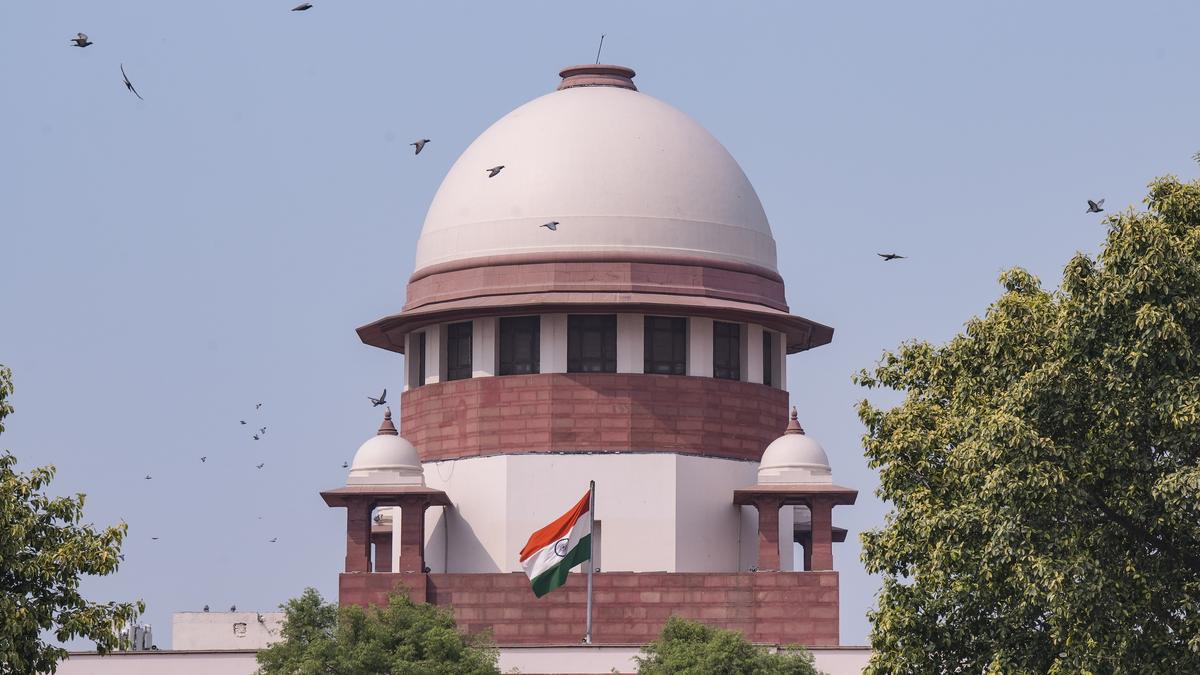
- 03 May 2025
In News:
Recently, the Supreme Court of India, in the case of Amar Jain v. Union of India &Ors., declared that inclusive digital access to e-governance and welfare systems is an integral part of the fundamental right to life and liberty under Article 21 of the Constitution. The Court issued a set of 20 binding directions to enhance the accessibility of digital services, especially the Know Your Customer (KYC) process, for persons with disabilities (PwDs) and other marginalized groups.
Background of the Case
The ruling arose from petitions filed which highlighted that digital KYC processes, which rely heavily on visual and facial inputs, were discriminatory and inaccessible to individuals with visual impairments or facial disfigurements. This impeded their access to banking, welfare schemes, and essential services.
Key Supreme Court Observations
- Digital access is part of Article 21: The right to life and liberty must now be interpreted to include meaningful digital access, particularly as governance, education, and financial services shift online.
- Constitutional mandate, not policy choice: Bridging the digital divide is not discretionary but a constitutional obligation under Articles 14, 15, 21, and 38.
- Substantive Equality: Digital services must be inclusive and equitable, particularly for:
- Persons with Disabilities (PwDs)
- Rural and remote communities
- Linguistic minorities
- Senior citizens
- Economically weaker sections
- Exclusion through technology: Digital platforms, in their current form, further alienate historically disadvantaged groups rather than empowering them.
Key Directives Issued by the Court
- Revise digital KYC norms to be PwD-inclusive.
- Reserve Bank of India (RBI) and other regulators must ensure universal accessibility.
- Mandate accessibility audits by certified professionals.
- Appoint nodal officers in each department to monitor compliance.
- Include PwDs in digital platform design processes.
- Ban discriminatory design features that rely solely on facial inputs.
Relevant Constitutional Provisions
Article Provision
Article 14 Equality before law
Article 15 Prohibition of discrimination
Article 21 Right to life and personal liberty
Article 38 Directive for securing social justice and reducing inequalities
Precedents in Digital Rights Jurisprudence
- Maneka Gandhi v. Union of India (1978): Expanded Article 21 to include fair, just, and reasonable procedures.
- Faheema Shirin v. State of Kerala (2019): First Indian case to recognize right to internet access as part of Right to Life and Right to Education (Article 21A).
- Anuradha Bhasin v. Union of India (2020): Held that freedom of speech (Article 19(1)(a)) and right to trade (Article 19(1)(g)) apply to the internet.
Barriers to Digital Empowerment of PwDs
- Digital Literacy Gap: PwDs are underrepresented in programs like PMGDISHA.
- Weak Enforcement: Accessibility mandates under the Rights of Persons with Disabilities Act, 2016 are poorly implemented.
- Limited Assistive Technology (AT): Lack of affordable tools for facially disfigured or visually impaired individuals.
- Design Exclusion: Platforms that depend on facial cues (e.g., blinking, alignment) exclude acid attack survivors and visually impaired users.
Way Forward: Recommendations for Inclusive Digital Access
- Accessible Digital Infrastructure:
- Promote screen readers, voice commands, haptic navigation, and AI-based assistive tech under Digital India.
- Adhere to Web Content Accessibility Guidelines (WCAG).
- Disability-Focused Digital Literacy:
- Collaborate with tech giants like Google/Microsoft to provide training in assistive technologies.
- Expand schemes like PMGDISHA to include PwD-specific modules.
- Disability-Sensitive Urban Planning:
- Incorporate assistive tech into Smart City projects.
- Public infrastructure should have Braille, audio, and sign language-based digital signage.
- Inclusive Innovation Lab:
- Establish Public-Private Innovation Hubs for developing affordable accessibility tech.
- Encourage startups and NGOs to co-create need-based digital solutions for PwDs.
National Security Advisory Board (NSAB)
- 03 May 2025
In News:
The Government of India has reconstituted the National Security Advisory Board (NSAB) with former R&AW chief Alok Joshi appointed as its Chairman. The move comes in the backdrop of increasing national security threats, including the recent terrorist attack in Pahalgam, which prompted a series of high-level security meetings chaired by Prime Minister Narendra Modi.
What is NSAB?
The NSAB is an advisory body functioning under the National Security Council (NSC). It offers independent, long-term strategic assessments and policy recommendations on national security issues.
- Established: December 1998, under NSA Brajesh Mishra
- Parent Body: National Security Council Secretariat (NSCS)
- Associated Bodies:
- National Information Board (NIB)
- Technology Coordination Group (TCG)
Composition of the Newly Reconstituted Board (2025)
- Chairman: Alok Joshi (Former R&AW Chief)
- New Members Include:
- Military:
- Air Marshal P.M. Sinha (ex-Western Air Commander)
- Lt Gen A.K. Singh (ex-Southern Army Commander)
- Rear Admiral Monty Khanna
- Police:
- Rajiv Ranjan Verma (Retd IPS)
- Manmohan Singh (Retd IPS)
- Diplomacy:
- B. Venkatesh Varma (Retd IFS, ex-Ambassador to Russia)
- Military:
Current NSAB Strength: 16 members, including military veterans, diplomats, academics, and civil society experts.
Functions and Objectives
- Provide non-partisan, long-term strategic inputs to the National Security Council.
- Recommend policy measures on defence, diplomacy, cyber security, and internal security.
- Assist in drafting key national security documents:
- Nuclear Doctrine (2001)
- National Security Review (2007)
- Hold monthly or emergency meetings to assess national and global threats.
- Submit independent reports to the NSA for evidence-based policy making.
- Act as a bridge between the strategic community and the government.
India’s First Certified Green Municipal Bond
- 03 May 2025
In News:
The Ghaziabad Nagar Nigam has become the first municipal body in India to issue a certified Green Municipal Bond, successfully raising ?150 crore to construct a Tertiary Sewage Treatment Plant (TSTP) — a major step toward sustainable urban water management.
What is a Green Municipal Bond?
A Green Municipal Bond is a financial instrument issued by Urban Local Bodies (ULBs) to finance projects with environmental benefits, such as:
- Renewable energy
- Water and wastewater treatment
- Pollution control
- Solid waste management
These bonds are aligned with international Green Bond Principles and require sustainability certification through independent third-party audits.
Key Features
- Targeted Use of Funds: Capital raised is exclusively allocated to environmentally certified projects.
- Independent Certification: Must meet Environmental, Social, and Governance (ESG) standards.
- Investor Confidence: Appeals to climate-focused investors, ESG funds, and global financial institutions.
- Municipal Creditworthiness: Encourages better financial management and credit ratings for ULBs.
Significance of the Initiative
- Supports SDGs: Contributes to UN Sustainable Development Goals, especially SDG 6 (Clean Water and Sanitation).
- Promotes Green Infrastructure: Enables low-emission urban development and enhances climate resilience.
- Enhances Water Security: Facilitates wastewater recycling, reducing dependence on freshwater sources.
- Replicable Model: Serves as a template for other municipalities to mobilize green capital for eco-projects.
Natural Hydrogen
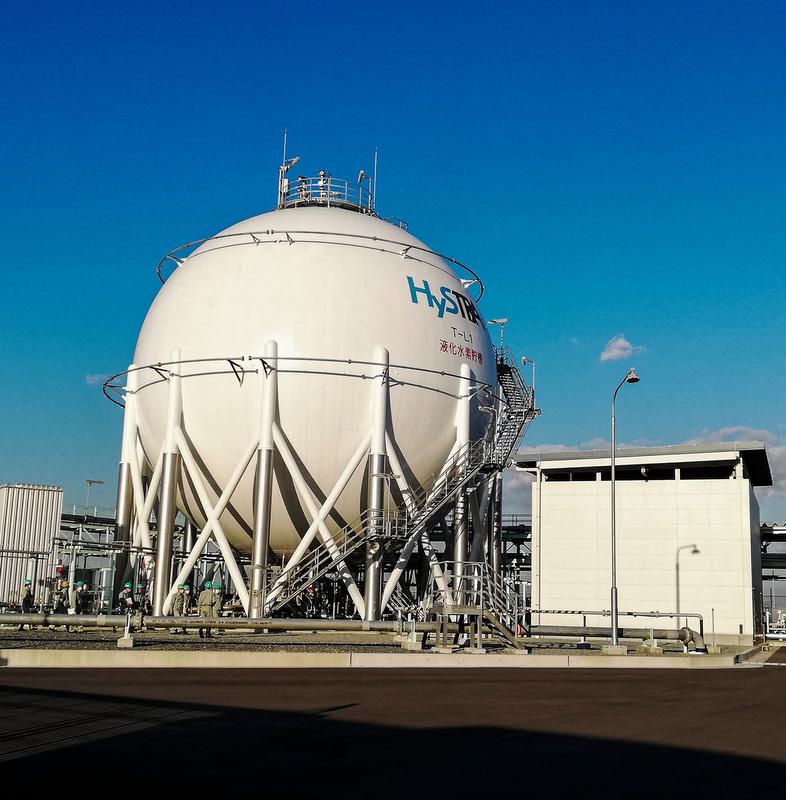
- 03 May 2025
In News:
Governments and private players globally are increasingly exploring natural hydrogen as a low-cost, zero-emission energy source. Recent discoveries in France’s Moselle region and growing interest in countries like India and the U.S. signal a new frontier in clean energy exploration.
What is Natural Hydrogen?
Natural hydrogen, or geologic hydrogen, refers to free molecular hydrogen (H?) naturally present underground due to geological processes. Unlike manufactured hydrogen (grey, blue, or green), it occurs naturally and can be extracted directly from the Earth.
Key Geological Sources:
- Serpentinisation: Water reacts with ultramafic rocks.
- Radiolysis: Water splits due to radioactive decay of rocks.
- Organic decomposition: Deep-seated carbon-rich matter releases hydrogen.
- Co-existence with helium: Indicates deep crustal origins.
Extraction Process
- Exploration: Detection of hydrogen seeps using geophysical tools.
- Drilling: Boreholes drilled in hydrogen-rich zones (e.g., Mali, U.S., France).
- Capture & Compression: Hydrogen is purified and compressed.
- Distribution: Delivered for use in fuel cells, refineries, or industries.
Why is it Important?
- Zero Emissions: Burns to produce only water vapor — no CO?.
- Cost-Effective: Estimated cost ~$1/kg, cheaper than green hydrogen.
- Renewable & Sustainable: Can replenish naturally in rock formations.
- High Efficiency: Hydrogen fuel cells are 3x more efficient than gasoline.
Historical Background
- 1987, Mali: Accidental discovery of a hydrogen-rich well during water drilling.
- 2012: Confirmed to be 98% pure hydrogen, sparking interest in natural reserves.
- Once viewed as a geological oddity, it is now recognized for its energy potential.
Global Exploration Trends
- Over 40 companies exploring hydrogen in Australia, U.S., Spain, France, Albania, Colombia, South Korea, Canada.
- USGS model (2022): Suggests potential to meet global hydrogen demand for ~200 years.
- France (2025): Moselle region found to contain ~92 million tonnes of natural hydrogen — worth ~$92 billion.
India’s Natural Hydrogen Potential
India has favourable geology for natural hydrogen generation:
- Ophiolite belts: Himalayas, Andaman.
- Cratons: Dharwar, Singhbhum greenstone belts.
- Sedimentary basins: Vindhyan, Cuddapah, Gondwana.
- Hydrothermal systems: Hot spring regions.
- Basement rocks: With deep fractures and mafic/ultramafic content.
A comprehensive geological survey is needed to assess extractable reserves.
Challenges in Adoption
- Lack of Mapping: Global hydrogen reserves are poorly explored.
- Scattered Deposits: Difficult to commercialize if reserves are dispersed.
- Storage & Transport: Requires high-pressure systems due to low density.
- Safety Risks: Odourless and flammable — hard to detect leaks.
- Infrastructure Deficit: Refuelling stations and pipelines still underdeveloped.
Way Forward
- National Hydrogen Mapping: Focus on cratonic belts and ophiolites in India.
- Policy Framework: Integrate natural hydrogen into the National Hydrogen Mission.
- Public-Private Collaboration: Offer PPPs, tax breaks, and R&D incentives.
- Global Partnerships: Collaborate with USGS, France, U.S. on exploration models.
- Infrastructure Investment: Build hydrogen hubs, refuelling stations, and pipelines.
Caste Census in India
- 03 May 2025
In News:
The Cabinet Committee on Political Affairs (CCPA) has recently approved the inclusion of caste enumeration in the forthcoming national Population Census. This marks a significant policy shift from its 2021 position, where the idea was set aside.
Understanding the Caste Census
A caste census involves the systematic recording of individuals' caste affiliations during a national population count. This exercise aims to generate detailed socio-economic profiles of various caste groups, facilitating better policy planning, especially in the context of welfare schemes and affirmative action.
Legal and Constitutional Framework
- No Direct Provision: The Constitution does not expressly mandate a caste census.
- Permissibility Under Article 340: The government is empowered to investigate the conditions of socially and educationally backward classes, which provides scope for caste-based data collection.
- Union Subject: As per Entry 69 of the Union List (Seventh Schedule), the Census falls within the legislative jurisdiction of the Union Government under Article 246.
Historical Context
- Colonial Era (1881–1931): The British administration included caste enumeration in decennial censuses, the last being in 1931.
- Post-Independence Practice (1951 onwards): Independent India has only counted Scheduled Castes (SCs) and Scheduled Tribes (STs) in its censuses.
- Socio-Economic and Caste Census (SECC) 2011: Though it aimed to gather caste-related data, the caste-specific findings remain unpublished due to concerns over accuracy.
Why a Caste Census is Relevant Today
- Evidence-Based Policy Making:Reliable data on Other Backward Classes (OBCs) is absent. For example, the Mandal Commission (1980) estimated OBCs at 52%, but this figure lacks empirical validation. Recent data from Bihar's 2023 caste survey pegged the OBC+EBC population at 63%.
- Restructuring Reservation:A caste census can guide rationalisation of quotas and potential sub-categorisation within OBCs, ensuring benefits reach the most deprived segments.
- Social Welfare Targeting:Caste-disaggregated data allows for focused delivery of healthcare, education, and livelihood schemes.
- Women’s Political Representation:Accurate population data is necessary for delimitation, a precursor to implementing the recently passed Women’s Reservation Act, which reserves seats for women in legislatures.
- Constitutional Backing:Article 15(4) enables the state to provide for the advancement of backward classes, but this requires reliable data for identification.
AIM4NatuRe
- 02 May 2025
In News:
On Earth Day 2025 (April 22), the Food and Agriculture Organization (FAO) of the United Nations launched the AIM4NatuRe (Accelerating Innovative Monitoring for Nature Restoration) initiative with funding from the United Kingdom (GBP 7 million / USD 9.38 million).
Key Highlights:
- The programme aims to enhance countries’ capacities to monitor and report ecosystem restoration as part of the Kunming-Montreal Global Biodiversity Framework (GBF).
- Objective: To support Target 2 of the Global Biodiversity Framework:Restore at least 30% of degraded ecosystems globally by 2030.
- Key Features
- Lead Agency: FAO (United Nations)
- Funding:
- GBP 7 million from the UK (approx. USD 9.38 million)
- Project duration: 2025–2028
- Scope of Restoration:
- Forests
- Wetlands
- Grasslands
- Marine ecosystems
- Degraded agricultural lands
- Technology Integration:
- Uses satellite tools, data analysis, and advanced monitoring systems
- Promotes standardized data formats and data interoperability
- Monitoring Support Tools:
- Introduces the Framework for Ecosystem Restoration Monitoring (FERM)
- Provides technical guidance and capacity development training
- Inclusivity & Indigenous Participation:
- Pilot projects in Brazil and Peru
- Supports Indigenous Peoples in biocentric monitoring — respecting traditional knowledge and holistic ecosystem restoration
Why It Matters
- Global Restoration Commitments: Nearly 1 billion hectares pledged for restoration
- Transparency & Accountability:
- Creation of a harmonized global dataset
- Public tracking of progress toward restoration goals
- Bridging Gaps:
- Responds to 80% of countries reporting lack of monitoring capacity (CBD survey)
- Provides tools and training for effective implementation and reporting
- Broader Goals:
- Tackles climate change, biodiversity loss, and land degradation
- Enhances food security and livelihoods
India moves to curb GM Alfalfa Seed imports amid US push for market access
- 02 May 2025
In News:
India is preparing to restrict the import of genetically modified (GM) alfalfa (lucerne) seeds, even as the United States urges a reduction in import duties on the crop. Alfalfa is a high-protein forage crop widely used for animal feed.
Key Highlights
- Alfalfa (Lucerne):
- Botanical Name: Medicago sativa
- Origin of Name: From Arabic al-fasfasa, meaning "the best forage"
- Nutritional Profile: Rich in vitamins A, C, K, B-complex, minerals (calcium, potassium, magnesium), proteins, fiber, and antioxidants
- Uses: Primarily as fodder, also consumed by humans for its health benefits
- Agricultural Benefit: Being a leguminous crop, it helps in nitrogen fixation
India’s Regulatory Stand
- The government plans to bar GM alfalfa seed imports under powers granted by the Environment (Protection) Act, 1986.
- A rapid detection kit may be developed by Indian scientists to identify GM seeds before unloading at ports.
- Phytosanitary Certification: All imported alfalfa seeds must be accompanied by valid certificates meeting India’s plant protection standards.
Current Import Policy & Tariffs
- HS Code: 12092100 (Lucerne seed for sowing)
- Effective Import Duty: 50.045%, broken down as:
- 30% Basic Customs Duty (BCD)
- 30% AIDC (Agri Infrastructure and Development Cess) on BCD
- 10% Social Welfare Surcharge on (BCD + AIDC)
- 5% IGST
- Import Status: Currently, India does not import alfalfa seeds due to high domestic availability and high import duty.
- Domestic Price: ?500–800/kg; imported seeds would cost more.
Other Forage Imports
- Berseem (Trifolium spp.): India imports mainly from Egypt and CIS countries
- Import Drop: From 5,776 tonnes (2023-24) to 618 tonnes (April 2024–Jan 2025) due to increased domestic production
Environmental and Agricultural Considerations
- Water Requirement: Alfalfa is water-intensive, making seed cultivation less viable in water-scarce regions.
- Alternative Option: Experts suggest importing direct alfalfa fodder instead of seeds to meet demand while conserving water and preserving agricultural land for oilseeds and pulses.
Global Context
- USA:
- World’s largest alfalfa producer
- Grows both GM and non-GM varieties
- Alfalfa is mostly grown under rainfed conditions, with lower yield compared to irrigated regions
Amazon’s Project Kuiper
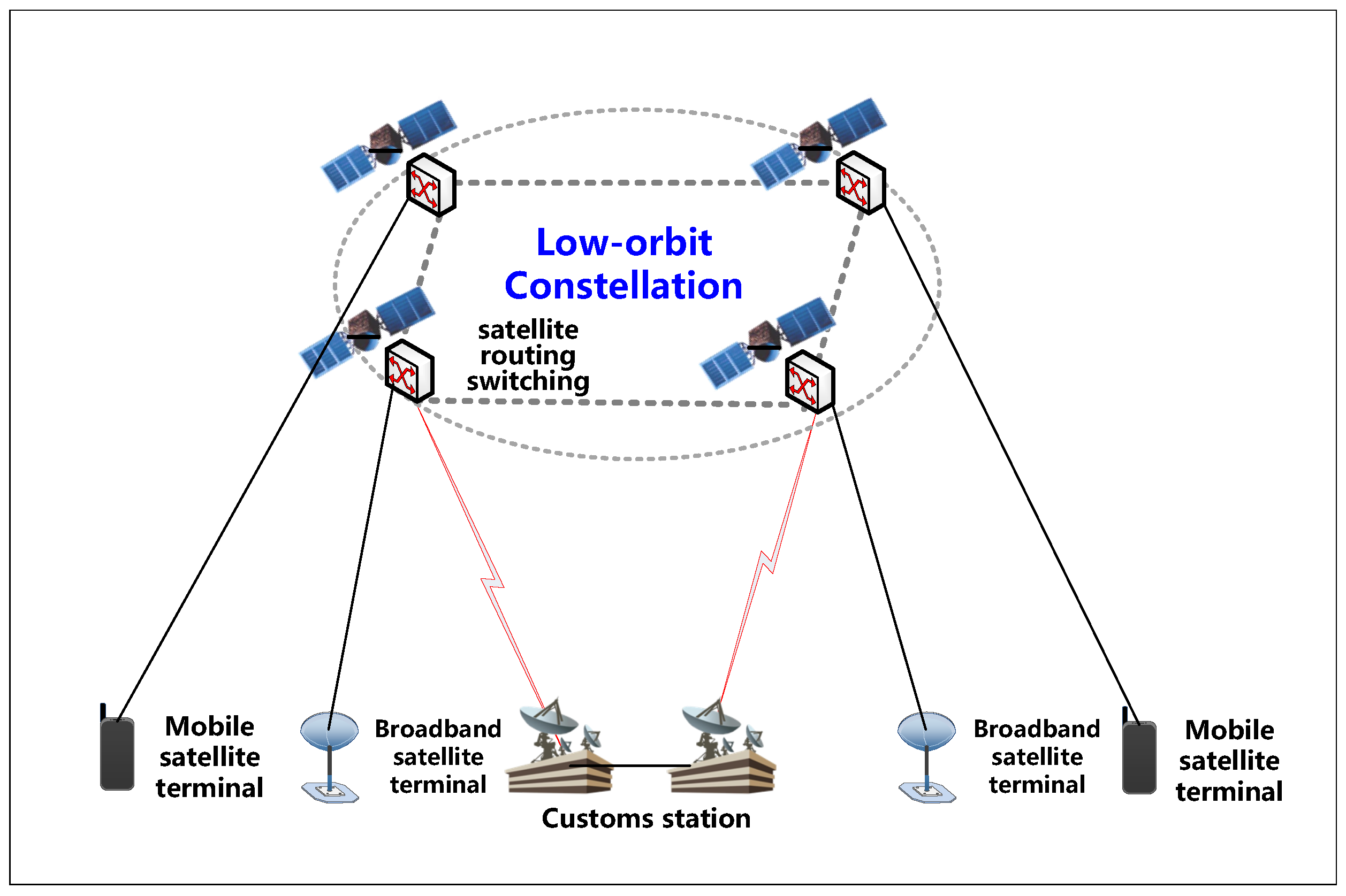
- 02 May 2025
In News:
Amazon successfully launched the first 27 satellites of Project Kuiper aboard an Atlas V rocket from Cape Canaveral Space Force Station, Florida. This marks the beginning of a large-scale effort to deploy a global satellite internet network to compete with SpaceX’s Starlink.
What is Project Kuiper?
Project Kuiper is Amazon’s satellite-based broadband project aimed at delivering high-speed internet across the globe, especially in underserved and remote regions, using Low Earth Orbit (LEO) satellites.
- Implementing Agency: Amazon
- FCC License: Approved in July 2020 by the US Federal Communications Commission
- Launch Name: KA-01 (Kuiper Atlas 1)
- Total Satellites Planned: 3,232 satellites in LEO (~630 km altitude)
- Current Launch: 27 satellites deployed; over 80 launches are planned to build the full constellation.
Objectives
- Provide affordable, high-speed internet to users across the globe.
- Support education, healthcare, disaster response, rural connectivity, and government services.
- Serve sectors requiring resilient communications in low-connectivity areas.
Internet Speed Tiers
Terminal Type Speed
Compact (Home Use) Up to 100 Mbps
Standard (Schools/Hospitals) Up to 400 Mbps
Large (Govt/Enterprise) Up to 1 Gbps
Comparison with Starlink and Other Satellite Internet Systems
Network Organisation Satellites Planned Current Status
Starlink SpaceX 40,000+ ~7,200 operational satellites; 5M+ users
OneWeb UK/India 648 Hundreds in orbit
Telesat Lightspeed Canada 298 In development
Guowang China 13,000+ Under planning
Project Kuiper Amazon 3,232 First 27 launched (May 2025)
How Satellite Internet Works
- Constellation: A network of satellites working in coordination to provide continuous global coverage.
- LEO Orbit: Satellites operate between 500–2,000 km altitude, offering low latency (20–40 ms).
- Ground Stations: Transmit and receive data to and from satellites.
- Inter-satellite Links: Use lasers/radio waves to relay data between satellites.
- AI-based Routing: Manages network traffic and reduces lag.
Technical Features
- Frequency Bands Used:
- Ka-band: High speed, weather-sensitive
- Ku-band: Balanced speed and reliability
- C-band: Slower, good in poor weather
- V-band: Experimental, ultra-fast but obstructed easily
- ACM Technology: Adjusts signal strength dynamically during adverse weather conditions.
Challenges
- High Cost: Satellite launches and user equipment are expensive.
- Weather Sensitivity: Rain and storms disrupt signals, especially in Ka/V bands.
- Space Debris Risk: Dense constellations increase chances of satellite collisions.
- Astronomical Interference: Bright satellite trails obstruct telescopic observations.
Strategic and Commercial Implications
- Project Kuiper marks Amazon’s entry into a growing space-based internet economy, competing with SpaceX’s Starlink.
- Expected to play a commercial and strategic role, including possible defence applications.
- With over 80 launches planned, Amazon will use various launch providers including ULA, Arianespace, Blue Origin, and SpaceX.
Red-Crowned Roofed Turtle
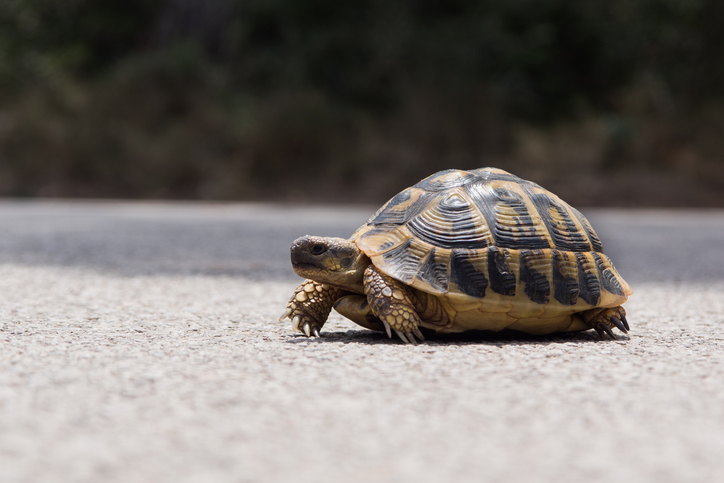
- 02 May 2025
In News:
After nearly 30 years of absence, the Red-Crowned Roofed Turtle (Batagurkachuga) has been rediscovered in the Ganga River — a significant success for conservation efforts aimed at reviving endangered freshwater species.
Overview
- Commonly known as the Bengal Roof Turtle, it is a rare species of freshwater turtle found only in South Asia.
- Scientific Name: Batagurkachuga
Geographical Distribution
- Native Range: India, Nepal, and Bangladesh.
- Historical Presence: Widely distributed across the Ganga River system in India and Bangladesh, with additional presence in the Brahmaputra River basin.
- Current Habitat in India: The most viable population is now confined to the National Chambal Sanctuary, a protected riverine stretch for species like gharials and turtles.
Distinctive Features
- Size: Medium-sized species, females can grow up to 56 cm in length and weigh up to 25 kg, while males are significantly smaller.
- Coloration: Notable for their reddish-orange head marked with a black crown, and a greenish-brown carapace patterned with yellow streaks.
- Plastron (under-shell): Yellow with distinctive black markings.
- Adaptations: Possess a broad head, strong jaws, and webbed feet, suited for an aquatic lifestyle.
- Diet: Omnivorous — consumes both plant material and small aquatic organisms.
Conservation Status
- IUCN Red List: Critically Endangered
- Wildlife (Protection) Act, 1972: Listed under Schedule I – providing the highest level of legal protection in India.
- CITES: Included in Appendix II, regulating international trade.
International Labour Day (May Day)
- 02 May 2025
In News:
International Labour Day, also known as May Day, is observed annually on May 1 to honor the dedication and contributions of workers across the globe.
Key Highlights:
- Observed On: May 1
- Also Known As: International Workers’ Day, May Day
- Purpose: To commemorate the contributions of workers and honor the global labor movement's struggles and achievements.
Historical Background
- Origin: The roots of International Labour Day trace back to Chicago, USA, where on May 1, 1886, workers launched a strike demanding an 8-hour workday.
- The protest culminated in the Haymarket Affair on May 4, 1886, when a bomb explosion led to the deaths of six police officers and several civilians, marking a major milestone in labor rights activism.
- In 1889, the Second International (Paris) declared May 1 as a day of international workers’ solidarity.
Global Observance
- Observed in over 160 countries, including India, China, Cuba, France, Germany, Brazil, South Africa, Russia, Vietnam, among others.
- Celebrated through parades, union meetings, and public demonstrations advocating workers’ rights and social justice.
Country-wise Observance Differences
- India: First observed in 1923 in Chennai by the LabourKisan Party of Hindustan. It is a public holiday, widely recognized across the country.
- United States: Despite its historical origin, the U.S. celebrates Labor Day on the first Monday of September, officially declared in 1894 after the Pullman Strike. The shift was made to distance the holiday from socialist and communist affiliations.
- Canada: Also celebrates Labor Day on the first Monday of September, following U.S. traditions, though May 1 has some informal recognition by trade unions.
- United Kingdom: Celebrates a related holiday called the Early May Bank Holiday on the first Monday of May, which may or may not fall on May 1. It is not explicitly labor-themed like in other countries.
Significance
- Serves as a global reminder of workers’ rights, the historical fight for humane working conditions, and the ongoing struggles of labor communities.
- Symbolizes solidarity among workers across nations, cutting across political ideologies and economic systems.
WAVES 2025 & WAM!
- 01 May 2025
In News:
In line with the vision of “Create in India, Create for the World,” the Ministry of Information & Broadcasting, in partnership with the Media & Entertainment Association of India (MEAI), is hosting WAVES 2025—India’s largest summit for the Media & Entertainment (M&E) sector. A major highlight of this summit is the WAM! (WAVES Anime & Manga Contest)—India’s first national initiative to promote original Indian IPs in anime, manga, webtoons, and cosplay.
What is WAM!?
- Full Form: WAVES Anime & Manga Contest.
- Nature: India’s first national initiative focused on discovering and nurturing original Indian creative intellectual properties (IPs) in:Anime, Manga, Webtoons&Cosplay
- Organisers: Ministry of Information & Broadcasting, in collaboration with MEAI.
- Finale: To be held at WAVES 2025, from May 1–4, 2025, at the Jio World Convention Centre, Mumbai.
- Participants: Finalists from 11 cities selected through regional contests.
Global Support & Incentives
- Crunchyroll, a global anime platform (a joint venture of Sony Pictures Entertainment and Aniplex, Japan), is the Title Sponsor of WAM! 2025.
- It has introduced a Creator Development Grant to support Indian talent and foster global-ready original content.
Grant Details
Category Student (INR) Professional (INR)
Manga 25,000 25,000
Webtoon 25,000 25,000
Anime 50,000 50,000
- Winners of WAM! 2025 will represent India at Anime Japan 2026 in Tokyo—one of the world's leading anime conventions—marking India’s presence on the global animation stage.
About WAVES 2025
- Full Form: World Audio-Visual & Entertainment Summit.
- Objective: Showcase India's capabilities in content creation, technological innovation, and media & entertainment IP development.
- Hosted by: Government of India.
- Venue: Jio World Convention Centre, Mumbai
Key Pillars of WAVES 2025
- AVGC-XR Sector Focus:Animation, Visual Effects, Gaming, Comics&Extended Reality (XR) including AR, VR, and Mixed Reality.
- "Create in India" Challenges (CIC):
- Season 1 witnessed over 1 lakh registrations, including 1,100 international participants.
- 750+ finalists selected through 32 unique creative challenges.
- Thematic Focus Areas:
- Broadcasting, Films, Television, Radio
- Print & Digital Media, Advertising, Social Media Platforms
- Sound & Music
- Generative AI, Augmented Reality (AR), Virtual Reality (VR), Extended Reality (XR)
- Target Audience: Content creators, industry professionals, investors, technology innovators, and global studios.
Urban Heat Island (UHI) Effect
- 01 May 2025
In News:
With accelerating urbanization and climate change, the Urban Heat Island (UHI) phenomenon has emerged as a significant public health and environmental concern. Recent studies, including one published in Nature Climate Change, highlight that while UHIs elevate heat-related mortality, they simultaneously reduce cold-related deaths, especially in colder regions. This dual impact has major implications for urban planning and climate adaptation strategies.
What is Urban Heat Island (UHI)?
- Definition: UHI refers to the phenomenon where urban areas experience higher temperatures than surrounding rural regions due to human activities and urban infrastructure.
- Cities Affected: Notable examples include New Delhi, Moscow, New York, Paris, and London, where dense infrastructure and limited vegetation intensify urban heat.
Key Causes of UHI
- Impervious Surfaces: Materials like asphalt and concrete absorb heat during the day and release it slowly at night due to low albedo.
- Lack of Vegetation: Reduced greenery limits evapotranspiration, curbing natural cooling.
- Anthropogenic Heat: Heat from vehicles, air conditioners, and industries raises ambient temperatures.
- Air Pollution: Black carbon and particulates absorb solar radiation, compounding heat effects.
- Urban Morphology: Dense construction and narrow streets create a canyon effect, trapping heat and reducing airflow.
Dual Impact on Mortality
A 2025 study led by Dr. Wenfeng Zhan analyzed temperature-related mortality across 3,000+ cities globally using remote sensing and socioeconomic data:
- Cold-related Deaths Reduced: In 2018, the decline in cold-related fatalities was 4.4 times higher than the rise in heat-related deaths due to UHI.
- High-Latitude Cities: In cities like Moscow, cold-related deaths decreased 11.5 times more than heat-related deaths increased.
- Key Insight: The UHI effect's net mortality impact can vary significantly by region and season.
Consequences of UHI
- Increased Energy Demand: Higher temperatures raise demand for air conditioning, increasing fossil fuel use and emissions.
- Health Risks: Elevated risks of heat stroke, dehydration, and cardiovascular stress, especially among the elderly and urban poor.
- Deterioration of Air Quality: Heat-induced formation of ground-level ozone exacerbates respiratory ailments.
- Water Stress: Faster evaporation and increased demand for cooling water pressure urban water resources.
- Biodiversity Decline: Excessive heat and lack of green spaces threaten urban flora and fauna.
Mitigation Strategies
- Cool Roofs (Los Angeles):Mandates reflective roofing in new buildings and renovations to reduce heat absorption.
- Smart Cooling Systems (Dubai):Centralized chilled water systems reduce cooling energy by 30–50% compared to individual AC units.
- Cool Streets Initiative (Paris):Converts streets to pedestrian zones, replaces asphalt with vegetation, and expands urban greenery.
India and the USTR Special 301 Report
- 01 May 2025
In News:
India has once again been placed on the Priority Watch List(PWL) in the United States Trade Representative (USTR) Special 301 Report, alongside countries such as China, Russia, and Venezuela. The report has raised concerns over India's Intellectual Property Rights (IPR) regime, prompting debates on the implications for India's trade and innovation environment.
What is the USTR Special 301 Report?
- Mandate & Purpose: The Special 301 Report is an annual review mandated under Section 182 of the US Trade Act of 1974, identifying countries that the US believes do not offer "adequate and effective" protection of IPR or deny fair and equitable market access to US IPR holders.
- Designations:
- Priority Foreign Country (PFC): Most severe classification; can trigger investigations and trade sanctions.
- Priority Watch List (PWL): Countries with serious IPR concerns requiring close monitoring and bilateral engagement.
- Watch List: Countries with moderate IPR issues.
- Historical Context: India has been consistently listed under the Priority Watch List in the report, including in the years 2020, 2021, and 2024.
Concerns Raised by the USTR Regarding India
- IP Enforcement Deficiencies:
- Weak enforcement mechanisms against online piracy.
- Backlogs in trademark opposition proceedings.
- Lack of a strong legal framework for protecting trade secrets.
- Pharmaceutical Patents:
- Alleged lack of transparency and delays in resolving pre-grant patent disputes.
- Absence of effective mechanisms for early resolution of disputes in the pharmaceutical sector.
- Copyright Issues:The report criticizes India for not fully aligning with WIPO Internet Treaties, especially regarding the protection of content in interactive transmissions like streaming and downloads.
- Market Access Concerns:The US claims that India imposes high tariffs on IP-intensive products and creates procedural barriers for foreign firms seeking patent protection.
India’s Response and Position
- India maintains that its IPR laws fully comply with the WTO’s TRIPS Agreement, which sets minimum standards for IP protection globally.
- India rejects unilateral pressure to conform to IP standards beyond TRIPS, asserting its right to balance IP protection with public health, access to medicines, and developmental needs.
- Progress has been acknowledged in areas like trademark investigation reforms and IP policy transparency through bilateral platforms such as the US-India Trade Policy Forum.
US Measures to Push IPR Standards
- The USTR uses a mix of bilateral negotiations, WTO forums, and technical assistance to persuade countries to adopt stricter IP regimes.
- It also undertakes anti-counterfeiting initiatives, capacity-building programs, and trade diplomacy to influence global IPR enforcement.
India's Arbitration Ecosystem

- 01 May 2025
In News:
India's growing stature as a global economic powerhouse has led to an upsurge in commercial transactions—both domestic and international. With the traditional litigation system overburdened (nearly 50 lakh cases pending for over 10 years), arbitration is increasingly viewed as a faster and more efficient alternative for dispute resolution. However, despite legislative reforms, the effectiveness of India’s arbitration landscape remains hindered by structural flaws, especially concerning arbitrator quality and institutional credibility.
What is Arbitration?
Arbitration is a quasi-judicial mechanism of Alternative Dispute Resolution (ADR) wherein a neutral third party (arbitrator) delivers a binding decision outside the court system. It is governed by the Arbitration and Conciliation Act, 1996, which aligns with the UNCITRAL Model Law. Amendments in 2015, 2019, and the draft Bill of 2024 aim to promote institutional arbitration, reduce delays, and enhance credibility.
Historical and Institutional Evolution
- 1899: Indian Arbitration Act introduced (limited to Presidency towns).
- 1940: Comprehensive domestic arbitration law enacted.
- 1996: Post-liberalization, India adopted UNCITRAL-compliant Arbitration and Conciliation Act.
- 2019: Establishment of India International Arbitration Centre (IIAC) to offer cost-effective and globally competitive arbitration services.
- Arbitration Council of India (ACI): Set up under 2019 Amendment to regulate and promote quality arbitration, headed by a retired SC/HC judge or expert.
Why Arbitration is Gaining Importance in India
- Judicial Backlog: With only 21 judges per million people, courts are overwhelmed. Arbitration offers a time-bound alternative (mandated 12-month timeline for award delivery).
- Economic Growth and FDI Surge: India attracted $1 trillion in FDI (2024), heightening cross-border disputes that demand specialized, swift dispute resolution.
- Confidentiality and Expertise: Arbitration provides procedural flexibility and protects sensitive commercial data—key for tech, pharma, and IP-driven sectors.
- Global Recognition: India is a signatory to the New York Convention, making its arbitral awards globally enforceable.
- Policy Push: Civil Procedure Code and National Litigation Policy (2010) encourage ADR to reduce court burden.
Core Challenges in India’s Arbitration Framework
- Judicial Dominance in Arbitrator Appointments:
- Retired judges dominate arbitration panels.
- Their court-centric mindset leads to lengthy, costly, and rigid processes, often mimicking litigation.
- The Ministry of Finance (2024) criticized these arbitrations as lacking efficiency and innovation.
- Narrow Arbitrator Pool:
- Predominantly comprises legal professionals and ex-judges.
- Lacks subject-matter experts like engineers, economists, and technologists, crucial for technical or industry-specific disputes.
- Insufficient Training and Accreditation:
- No mandatory certification or capacity-building for arbitrators.
- Skills like cross-cultural communication, financial analysis, and evidence handling are often underdeveloped.
- Low Global Representation:
- Indian arbitrators are rarely appointed in international disputes without an Indian party.
- As highlighted by former CJI D.Y. Chandrachud (2024), this points to gaps in credibility, visibility, and networking.
Reforms Needed to Build a Robust Arbitration Ecosystem
- Diversify and Professionalize Arbitrator Pool:
- Move beyond reliance on retired judges.
- Include professionals from fields like law, finance, engineering, and management.
- Accreditation and Skill Development:
- Establish a National Accreditation Board for Arbitrators under the Ministry of Law and Justice.
- Mandate rigorous training via institutions like IIAC or professional bodies.
- Encourage soft-skills and exposure to global best practices.
- Institutional Strengthening:
- Boost the functioning of IIAC and ACI for better standards, accountability, and case management.
- Promote institutional arbitration over ad hoc arbitration.
- Awareness and Capacity Building:
- Launch a National Arbitration Awareness Mission targeting MSMEs and Tier-2/3 cities.
- Integrate with existing platforms like Startup India, Skill India, and MSME Sambandh.
- Limit Judicial Interference:
- Strict adherence to the “minimum judicial intervention” principle (as per the 1996 Act).
- Establish dedicated commercial courts with arbitration-specialist judges for related matters.
- International Engagement and Visibility:
- Partner with global arbitral institutions (e.g., SIAC, ICC).
- Organize International Arbitration Summits to showcase Indian capabilities.
- Use forums like UN, IBA, and G20 to promote Indian arbitrators globally.
Brain-Computer Interface (BCI) Breakthrough
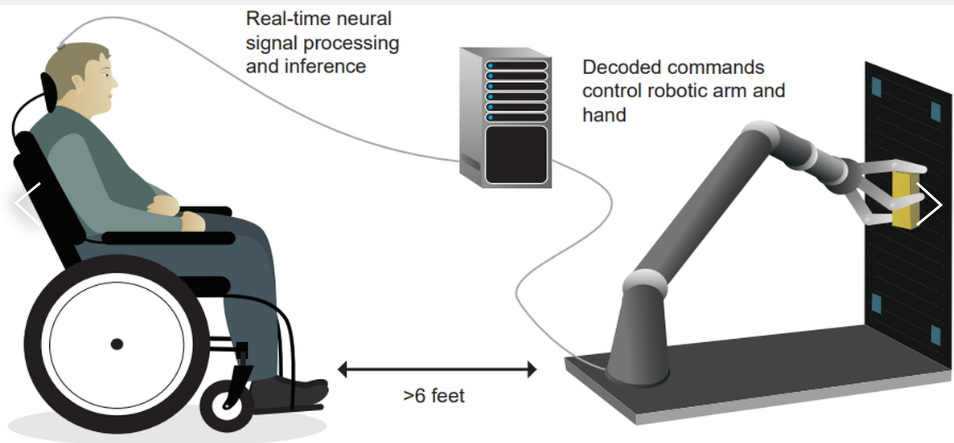
- 01 May 2025
In News:
In a pioneering advancement in neurotechnology and assistive healthcare, scientists at the University of California, San Francisco (UCSF)have developed a stable Brain-Computer Interface (BCI) system that enables a paralysed individual to control a robotic arm using only brain signals. This innovation holds transformative potential for people with paralysis, significantly enhancing autonomy and quality of life.
What is Brain-Computer Interface (BCI)?
A Brain-Computer Interface (BCI) is a neurotechnological system that establishes direct communication between the brain and external devices, bypassing damaged neural pathways. It decodes neural signals related to intended movements and translates them into actionable commands to control robotic limbs, computers, or speech systems.
Key Technological Achievements
- Long-Term Stability: The developed BCI system allowed continuous and accurate control of a robotic arm for over 7 months with minimal recalibration, overcoming a major limitation of earlier BCI systems.
- Sensor Implantation: Tiny electrodes were implanted in the motor cortex, the region of the brain that governs movement.
- AI-Powered Signal Decoding: The system used machine learning algorithms to decode brain activity and adapt to daily shifts in neural signals, ensuring consistent performance.
- Virtual to Real Transition: The participant underwent virtual training with a robotic arm before controlling a real-world robotic limb, aiding in precision and neural calibration.
Functionality Demonstrated
The paralysed participant, who had lost all movement and speech abilities due to a stroke, could:
- Pick up and rotate blocks
- Open cabinets
- Retrieve and position a cup under a water dispenser
These basic actions, enabled purely by imagined movement, highlight the immense real-world utility of the BCI system.
Scientific Insights
- High-Dimensional Neural Mapping: Although neural signals shifted slightly each day, their overall structure remained consistent. This allowed researchers to create a dynamic AI framework that predicted and compensated for signal changes.
- No Direct Brain Stimulation: The system only read signals and did not send any electrical impulses to the brain.
- End-to-End Signal Processing Pipeline: From capturing brain signals to executing robotic arm movement, a seamless pipeline was established for fluid, real-time motion.
Broader Applications
The implications of this BCI research go beyond limb movement:
- Restoration of Speech: In cases of ALS (Amyotrophic Lateral Sclerosis) and brainstem stroke, BCIs can decode intended speech from neural activity and render it as text, synthesized voice, or avatar speech.
- Faster Communication: A recent trial showed an ALS patient using BCI technology to communicate at 62 words per minute, nearly 3.4 times faster than earlier systems.
Future Prospects & Challenges
- Scalability: More work is needed to generalize this system for diverse forms of paralysis.
- Complex Environments: Future BCIs must function in real-world environments filled with distractions, like grocery stores or public spaces.
- Ethical and Regulatory Oversight: Given the invasive nature of electrode implantation, ethical considerations around consent, privacy, and long-term effects must be addressed.
Nag Anti-Tank Missile System (NAMIS)
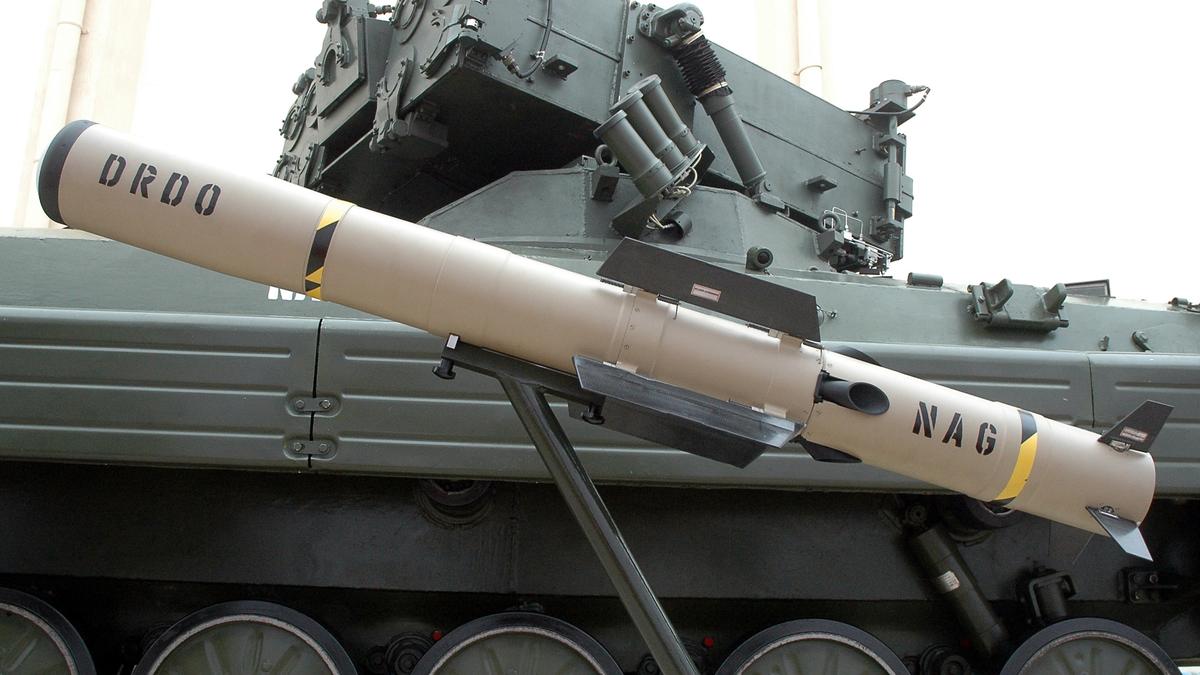
- 31 Mar 2025
In News:
The Ministry of Defence (MoD) signed contracts worth approximately ?2,500 crore for procuring advanced anti-tank missile systems and light vehicles to enhance the Indian Army's operational capabilities.
Nag Anti-Tank Missile System (NAMIS)
- Development and Production:Developed by the Defence Research and Development Laboratory (DRDL) under the Defence Research and Development Organisation (DRDO) and produced by Bharat Dynamics Limited (BDL).
- System Overview:NAMIS is a tracked, third-generation anti-tank guided missile (ATGM) system mounted on a BMP-2 chassis (Nag Missile Carrier or NAMICA). It features a ‘fire-and-forget’ capability, employing an Imaging Infrared (IIR) seeker to lock on to heavily armored targets before launch.
- Key Features:
- Range: 500 meters to 4 kilometers.
- Attack Modes:
- Top Attack Mode: Missile climbs and strikes the target from above to penetrate weaker top armor.
- Direct Attack Mode: Missile flies directly to strike the target.
- Night Capability: Operates effectively under low visibility.
- Mobility: Based on the amphibious BMP-2, NAMIS can operate across varied terrains.
- Significance:The tracked NAMIS enhances the anti-tank capabilities of mechanized infantry, marking a crucial step in modernizing the Indian Army’s battlefield readiness.
- Other Nag Variants:The Helina is a helicopter-launched version designed for deployment on Rudra and Light Combat Helicopters (LCH), successfully tested in 2018.
Light Vehicles Procurement
- The MoD signed contracts with Force Motors Limited and Mahindra & Mahindra Limited for around 5,000 light vehicles.
- These vehicles are equipped with enhanced engine power and designed to carry payloads of up to 800 kg, ensuring mobility across diverse terrains and operational conditions.
Additional Defence Contract
- Zen Technologies Limited secured a contract worth approximately ?152 crore for supplying Integrated Air Defence Combat Simulators (IADCS) for the Army’s L70 air defence guns.
- The IADCS is a virtual training system developed under the Make-II category to provide realistic simulation-based training for air defence operations.
CAG and BISAG-N collaborate to enhance auditing through advanced Geo-spatial Technologies
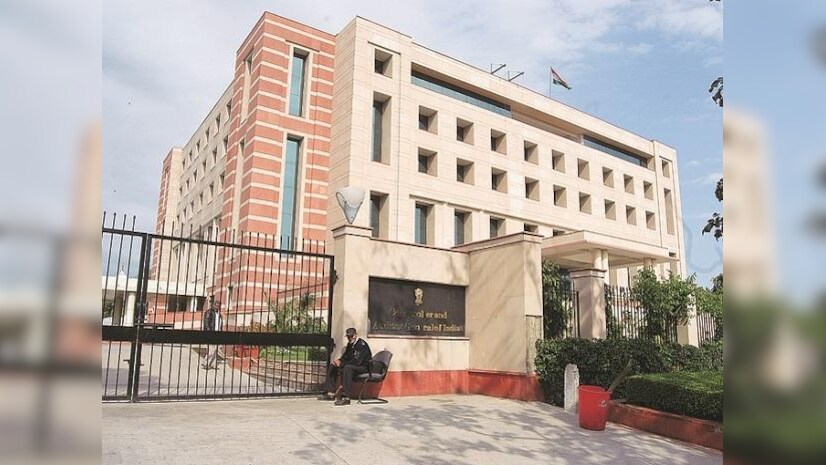
- 31 Mar 2025
In News:
The Comptroller and Auditor General (CAG) of India has entered into a significant partnership with the Bhaskaracharya National Institute for Space Applications and Geo-informatics (BISAG-N) to leverage advanced technologies in geographic information systems (GIS), remote sensing, and satellite image analytics for strengthening audit processes.
About BISAG-N
- Institution Profile: BISAG-N is an autonomous scientific society under the Ministry of Electronics & Information Technology (MeitY), Government of India, located in Gandhinagar, Gujarat. It operates under the Societies Registration Act, 1860.
- Core Domains: The institute specializes in satellite communication, geo-informatics, and geo-spatial technologies.
- Functions: BISAG-N develops and manages GIS databases, creates and updates maps, conducts data migration and format translation, provides software customization and systems integration, and offers technical consulting for large-scale GIS implementations.
- Applications: It delivers comprehensive geo-spatial solutions including photogrammetry, cartography, remote sensing applications for agriculture (crop monitoring), watershed management, forest fire mapping, and environmental resource management.
- Collaborations: BISAG-N works closely with central ministries and state government agencies to support planning and development activities using space and geo-spatial technologies.
Details of the CAG-BISAG-N Partnership
- Objective: The partnership aims to integrate cutting-edge geo-spatial tools such as Artificial Intelligence (AI), Machine Learning (ML), and Big Data Analytics into the CAG's audit methodologies. This will enhance audit accuracy, efficiency, and accountability.
- Key Focus Areas:
- Developing customized geo-spatial solutions and platforms for audit analysis.
- Utilizing data available from government initiatives like PM GatiShakti for comprehensive audit evaluations.
- Conducting joint research in geo-spatial analysis, remote sensing, and satellite image analytics.
- Organizing training and capacity-building programs to equip CAG officials with skills in geo-spatial technologies.
- Significance: This collaboration reflects the CAG’s commitment to adopting digital public infrastructure and technological innovation, enhancing governance, and reinforcing financial accountability in India’s public institutions.
Gaia Space Observatory
- 31 Mar 2025
In News:
The European Space Agency (ESA) has officially retired its Gaia space observatory after over nine years of pioneering work in astrometry. Launched in December 2013, Gaia was designed to create the most detailed three-dimensional map of the Milky Way galaxy, transforming our understanding of its structure, evolution, and constituents.
About Gaia
- Mission Objective: Gaia aimed to precisely measure the positions, distances, motions, and physical properties of over 2 billion stars within the Milky Way. Its data helps scientists study the galaxy’s formation, predict its future evolution, and explore celestial phenomena.
- Orbit & Technology: Stationed at the second Lagrange point (L2), about 1.5 million kilometers from Earth, Gaia operated beyond the disturbances of Earth’s atmosphere, sun, and moon. Equipped with twin telescopes focusing light onto a nearly one-billion-pixel digital camera—the largest ever deployed in space—the observatory had three key instruments: an astrometer, photometer, and spectrometer to measure stellar positions, brightness, and compositions.
Major Contributions and Discoveries
- 3D Galactic Map: Gaia revealed the warped and wobbling nature of the Milky Way’s disc, mapped its spiral arms and central bulge, and detailed its dynamic evolution shaped by ancient galactic collisions. These findings shed light on events influencing the formation of stars including our Sun.
- New Black Holes: The mission identified previously unseen black holes detectable only by their gravitational influence, marking a first in astronomical observations.
- Asteroid Cataloguing: Gaia tracked the paths of over 150,000 asteroids, enabling better prediction of their trajectories and potential threats to Earth.
- Legacy and Data: Although Gaia has mapped approximately 2% of the galaxy’s stars so far, its extensive data sets continue to be processed and released, promising decades of future scientific breakthroughs.
End of Mission and Legacy
In March 2025, ESA safely deactivated Gaia by draining its energy and shifting it to a retirement orbit around the Sun, ensuring it does not interfere with upcoming missions. While the spacecraft’s active observations have ended, Gaia’s rich data legacy remains invaluable to astronomers worldwide.
Sahkar Taxi
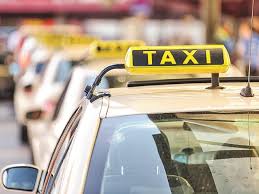
- 31 Mar 2025
In News:
The government has announced the upcoming introduction of ‘Sahkar Taxi’, a cooperative-based ride-hailing platform designed to directly benefit drivers by eliminating intermediary commissions.
What is ‘Sahkar Taxi’?
‘Sahkar Taxi’ is a ride-hailing service supported by the government, operated through cooperative societies. Unlike conventional app-based services such as Ola and Uber, this platform allows drivers to retain their full earnings, without deductions by middlemen or aggregators. It draws inspiration from existing app-based models but is fundamentally driven by cooperative principles.
Why is ‘Sahkar Taxi’ Needed?
- Concerns Over Commission Charges: Leading ride-hailing apps have faced criticism for imposing high commission fees, reducing the take-home earnings of drivers.
- Pricing Transparency Issues: Allegations of differential pricing based on the type of user device (e.g., iPhone versus Android) have sparked doubts regarding fairness and transparency.
- Driver Challenges: Centralized control by large platforms often leaves drivers with limited negotiation power and inadequate income security.
Importance and Impact of ‘Sahkar Taxi’
- Driver Empowerment: By establishing a cooperative ownership model, drivers gain a stronger stake in the business, leading to improved financial stability.
- Decentralized Economic Participation: The initiative encourages local involvement and collective growth, aligning with the government’s vision of ‘Sahkar Se Samriddhi’ (Prosperity through Cooperation).
- Sustainable Alternative: It presents a viable, inclusive option to the dominant profit-driven ride aggregator market, focusing on equitable benefit sharing.
- Enhanced Consumer Confidence: The cooperative framework promotes transparent pricing and greater accountability in digital service delivery, fostering trust among users.
National Technical Textiles Mission
- 31 Mar 2025
In News:
India’s textile sector plays a vital role in the country’s economy, contributing nearly 2% to GDP and ranking as the world’s 6th largest textile exporter with a 3.9% share of global textile exports. The sector is projected to grow to USD 350 billion by 2030, generating around 3.5 crore jobs. Alongside traditional textiles, technical textiles—specialized fabrics designed for specific industrial and functional uses—are emerging as a major growth driver.
What are Technical Textiles?
Technical textiles are fabrics engineered for performance rather than aesthetics. They serve diverse sectors such as agriculture, healthcare, construction, automotive, and safety by providing solutions like protective gear, medical textiles, geotextiles, and industrial fabrics. The industry segments technical textiles into 12 categories based on application.
National Technical Textiles Mission (NTTM)
To capitalize on this potential, the Ministry of Textiles launched the National Technical Textiles Mission (NTTM) in 2020, with an outlay of ?1,480 crore running through 2025-26. The mission aims to position India as a global leader in technical textiles by focusing on innovation, research, market expansion, export promotion, and skill development.
Four Pillars of NTTM:
- Research, Innovation, and Development: Funding and supporting R&D projects to develop new materials and processes.
- Promotion and Market Development: Facilitating wider adoption of technical textiles domestically and internationally.
- Export Promotion: Establishing dedicated export councils to enhance global market access.
- Education, Training, and Skill Development: Training 50,000 individuals, from students to professionals, through specialized courses and industry internships.
Since its inception, NTTM has approved 168 research projects worth ?509 crore and allocated ?517 crore towards mission activities. So far, ?393.39 crore has been utilized for research, market promotion, export, and skill training.
Key Initiatives under NTTM
- GIST 2.0 (Grant for Internship Support in Technical Textiles): Bridges academia and industry by providing hands-on learning and internships, fostering innovation and supporting the Make in India initiative.
- GREAT Scheme (Grant for Research & Entrepreneurship across Aspiring Innovators in Technical Textiles): Funds startups and educational institutions to commercialize innovative technical textile products. For example, 8 startups received ?50 lakh each to develop medical, industrial, and protective textiles. IIT Indore and NIT Patna were awarded ?6.5 crore to launch specialized courses in geotextiles and sports textiles.
- Skill Development: Courses developed by premier textile research associations like SITRA, NITRA, and SASMIRA train workers in sectors such as medical, protective, mobile, and agricultural textiles.
- Technotex 2024: A platform showcasing cutting-edge projects under the NTTM Innovation Zone, featuring 71 innovations to attract global investments.
Impact and Success Stories
India is witnessing rapid innovation in technical textiles. For instance, Eicher Goodearth’s “Mahina” is India’s first bonded leak-proof period underwear, providing 12-hour protection using natural materials and reusable up to 100 washes.
Several states are prioritizing technical textiles growth through policy support. Tamil Nadu’s budget highlights include establishing the PM MITRA Park in Virudhunagar and a textile park in Salem, along with increased subsidies for machinery modernization in spinning units—from 2% to 6%—to lower costs and boost competitiveness.
New Pamban Rail Bridge
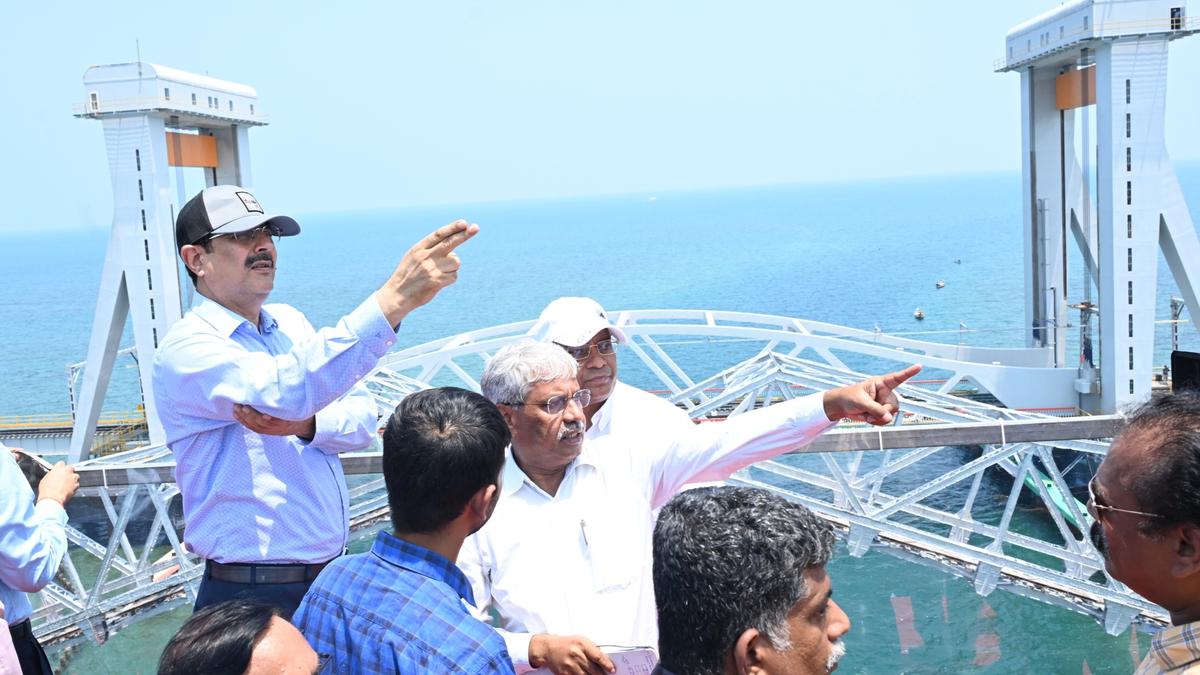
- 30 Mar 2025
In News:
Prime Minister Narendra Modi inaugurated the newly constructed Pamban Rail Bridge on April 6, 2025, coinciding with Ram Navami. The bridge connects Mandapam (mainland Tamil Nadu) to Rameswaram Island, replacing the century-old Pamban bridge.
Key Highlights:
- Total Project Cost: ?531 crore
- Constructed by:Rail Vikas Nigam Limited (RVNL)
- Bridge Type:Vertical-lift railway bridge – thefirst of its kind in India
- Total Length:2.2 km
- Lift Span:72 metres, enabling automated vertical clearance for ships
- Technology: Fully automated lift mechanism (unlike manual operation in the old bridge)
- Materials: Constructed with corrosion-resistant materials for improved longevity
- Sustainability:Solar-compatible design for future energy efficiency
Significance:
- Enhances rail connectivity to Rameswaram, a major religious and tourist destination.
- Improves maritime navigation safety by enabling faster ship movement through the lift span.
- Strengthens coastal infrastructure in Tamil Nadu, supporting economic and strategic interests.
Old Pamban Bridge (1914–2022): A Legacy
- Inaugurated: 1914 by British India (under Madras Railway)
- Length: 2.065 km with 143 piers
- Mechanism:Double-leaf bascule (Scherzer lift) manually operated for ship passage
- Structure Height: 12.5 m above sea level
- Distinction: India’s first sea bridge; remained operational for over 108 years
- Reason for Closure: Severe corrosion led to decommissioning in 2022
Safety and Commissioning Notes:
- The Commissioner of Railway Safety (CRS) conducted a statutory inspection in November 2024.
- CRS had flagged structural and planning lapses; rectification was completed before inauguration.
- Parts of the old bridge will be preserved due to its historical value, though full relocation is not feasible.
Additional Developments:
- New Train Flagged Off: PM Modi flagged a new train service between Tambaram and Rameswaram.
- Rameswaram Station Redevelopment: Work is underway and expected to be completed by September 2025.
Great White Sharks

- 30 Mar 2025
In News:
A 20-year study in South Africa reveals that the decline of Great White Sharks disrupted marine ecosystems, causing cascading food web imbalances.
Key Highlights:
- Scientific Name:Carcharodon carcharias
- IUCN Red List Status:Vulnerable
- Habitat and Distribution:
- Commonly found in temperate coastal waters, including regions off the USA, South Africa, Australia, and Japan.
- Highly migratory, often venturing into tropical waters but returning to temperate zones for feeding.
- Key Biological Features:
- Endothermic Adaptation: Capable of maintaining body temperature higher than surrounding waters (regional endothermy).
- Body Structure: Streamlined, torpedo-shaped body with serrated teeth for efficient hunting.
- Feeding Behavior: Ambush predator – uses a "bite-and-wait" strategy to hunt seals, dolphins, and large fish.
- Reproduction:
- Viviparous: Gives birth to live young.
- Gestation Period: Around 12 months.
- Maturity:
- Females: Mature at 15–16 feet, around 12–18 years of age.
- Males: Mature at 11–13 feet, around 10 years of age.
- Ecological Importance:
- Apex Predator: Plays a crucial role in maintaining the balance of marine ecosystems by regulating populations of prey such as seals and mid-level predators.
- Indicator Species: Their presence signals the health and stability of marine ecosystems.
- Ecological Disruption in South Africa – Key Findings:
- A 20-year study in False Bay, South Africa, revealed a significant decline in Great White Shark numbers.
- This led to:
- A surge in seal populations and sevengill sharks.
- A corresponding collapse in populations of smaller sharks and fish, showcasing a trophic cascade and food web imbalance.
USCIRF’s 2025 Report
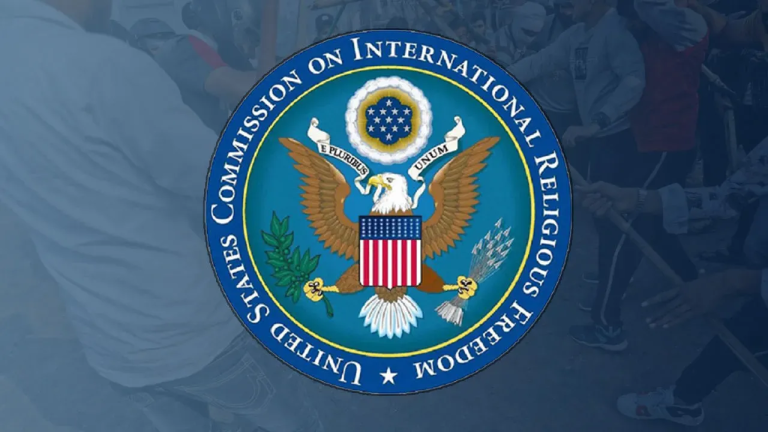
- 30 Mar 2025
In News:
In its 2025 Annual Report, the United States Commission on International Religious Freedom (USCIRF) recommended designating India as a "Country of Particular Concern" (CPC), citing alleged systemic violations of religious freedom.
Key USCIRF Recommendations:
- Label India as a CPC under the International Religious Freedom Act (IRFA), 1998.
- Impose targeted sanctions on Indian institutions, including the Research and Analysis Wing (RAW), and individuals such as Vikash Yadav.
- Review bilateral defence agreements, including drone deals.
- Prioritise religious freedom in diplomatic dialogues with India.
- Reintroduce the Transnational Repression Reporting Act, 2024 to monitor global religious freedom violations.
About USCIRF:
- Established by: U.S. Congress (1998) under IRFA.
- Nature: Independent, bipartisan federal agency.
- Not affiliated with: U.S. State Department (but works in coordination).
- Structure: 9 Commissioners appointed by the U.S. President and Congressional leaders.
- Mandate: Monitor global religious freedom (FoRB), advise U.S. leadership, recommend sanctions, and publish annual reports.
Core Functions:
- Track global trends in freedom of religion or belief.
- Recommend policy actions including CPC designation.
- Advocate for religious prisoners of conscience.
- Maintain a FoRB Victims List and issue thematic reports.
India’s Official Response:
The Ministry of External Affairs (MEA) firmly rejected USCIRF’s report, calling it “biased and politically motivated.”
- MEA Spokesperson Randhir Jaiswal criticized the report for misrepresenting isolated incidents and ignoring India’s multicultural and pluralistic society.
- Highlighted India’s 1.4 billion diverse population, representing all major religions.
- Emphasized that USCIRF’s assessments reflect a deliberate narrative rather than genuine concern for religious rights.
- Asserted that such reports would not affect India’s image as a democratic and tolerant nation.
- Called for USCIRF itself to be recognized as an “entity of concern.”
Vertically-Launched Short-Range Surface-to-Air Missile (VL-SRSAM)
- 30 Mar 2025
In News:
India successfully conducted a flight test of the VL-SRSAM from a defence testing range off the Odisha coast.
Overview:
- Type: Indigenous short-range surface-to-air missile (SRSAM)
- Developed by: Defence Research and Development Organisation (DRDO)
- Purpose: Designed for quick reaction air defence, capable of intercepting a variety of aerial threats including low-altitude sea-skimming targets.
- Users:Originally developed for the Indian Navy, with applications now extending to the Indian Air Force for safeguarding air bases.
Performance Parameters:
- Initial range: 40 km (Navy version)
- Extended range: Up to 80 km
- Maximum altitude: 16 km
- Top speed: Mach 4.5
Technical Specifications:
- Length: 3.93 meters
- Diameter: 178 mm
- Wingspan: 508 mm
- Weight: ~170 kg
- Propulsion: Solid fuel
- Guidance System:
- Mid-course: Inertial navigation based on fibre-optic gyroscope
- Terminal phase: Active radar homing
- Launcher Configuration: Twin quad-pack canisters integrated with weapon control systems (WCS) for multiple missile launches.
Significance:
- Enhances India's self-reliant air defence capability.
- Supports indigenous development under the Aatmanirbhar Bharat initiative.
- Strengthens India's maritime and aerial defensive posture through versatile deployment.
Baalpan ki Kavita Initiative

- 30 Mar 2025
In News:
To fulfil the vision of NEP 2020, the Department of School Education & Literacy (DoSE&L), Ministry of Education has launched “Baalpan ki Kavita initiative: Restoring Bhartiya rhymes/poems for young children” for preparing a compendium of nursery rhymes/poems in all Bhartiya Bhasha and also in English, focusing on content relevant to the Indian context.
Key Highlights:
Objective:To compile a national-level compendium of nursery rhymes and poems in all Bhartiya Bhashas (Indian languages) and English, with a focus on culturally relevant content for early childhood learning.
Key Features:
- Encourages multilingual and mother-tongue based education, in line with National Education Policy (NEP) 2020.
- Aims to make foundational learning joyful, relatable, and rooted in Indian ethos.
- Invites existing folklore rhymes and newly composed poems across three age-based categories:
- Pre-primary: Ages 3–6
- Grade 1: Ages 6–7
- Grade 2: Ages 7–8
- Open to submissions in all Indian languages and English.
Significance:
- Reinforces foundational literacy through culturally contextual content.
- Promotes regional literature, creativity, and early multilingualism.
- Strengthens identity and connection to Indian culture from an early age.
Baalpan ki Kavita Initiative

- 30 Mar 2025
In News:
To fulfil the vision of NEP 2020, the Department of School Education & Literacy (DoSE&L), Ministry of Education has launched “Baalpan ki Kavita initiative: Restoring Bhartiya rhymes/poems for young children” for preparing a compendium of nursery rhymes/poems in all Bhartiya Bhasha and also in English, focusing on content relevant to the Indian context.
Key Highlights:
Objective:To compile a national-level compendium of nursery rhymes and poems in all Bhartiya Bhashas (Indian languages) and English, with a focus on culturally relevant content for early childhood learning.
Key Features:
- Encourages multilingual and mother-tongue based education, in line with National Education Policy (NEP) 2020.
- Aims to make foundational learning joyful, relatable, and rooted in Indian ethos.
- Invites existing folklore rhymes and newly composed poems across three age-based categories:
- Pre-primary: Ages 3–6
- Grade 1: Ages 6–7
- Grade 2: Ages 7–8
- Open to submissions in all Indian languages and English.
Significance:
- Reinforces foundational literacy through culturally contextual content.
- Promotes regional literature, creativity, and early multilingualism.
- Strengthens identity and connection to Indian culture from an early age.
Tejas LCA Mk1A
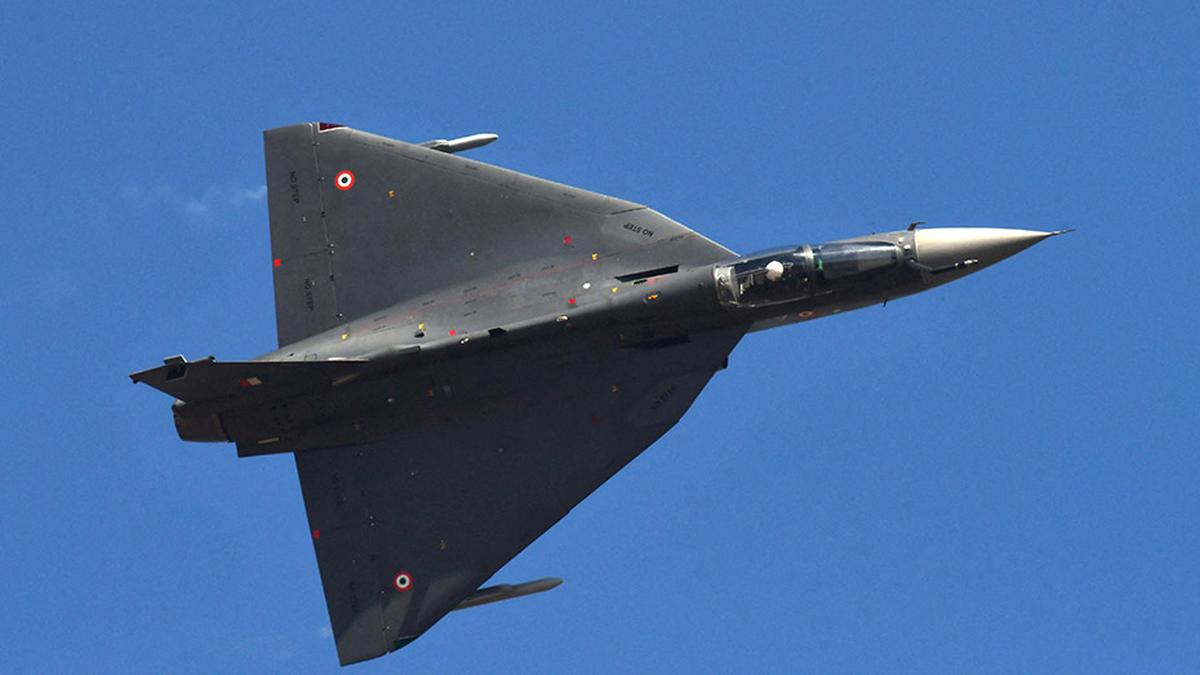
- 29 Mar 2025
In News:
GE Aerospace has commenced delivery of F404-IN20 jet engines to Hindustan Aeronautics Limited (HAL) for the Tejas Light Combat Aircraft Mk1A. This marks a significant milestone in India’s indigenous defence production capabilities and is vital for bridging the Indian Air Force's (IAF) operational gaps.
Background on Tejas LCA Mk1A
- Tejas LCA Mk1A is an advanced version of the indigenous Light Combat Aircraft (LCA) developed by HAL.
- It incorporates over 40 improvements over the Mk1 variant, aimed at enhancing combat readiness, survivability, and ease of maintenance.
Key Features:
- Radar Systems:
- Israeli EL/M-2052 AESA Radar.
- Indigenous Uttam AESA Radar (under integration).
- Electronic Warfare:
- Unified Electronic Warfare Suite (UEWS).
- Advanced Self-Protection Jammer Pod.
- Weapons Capability:Nine hardpoints supporting Beyond Visual Range (BVR) missiles, Air-to-Air and Air-to-Ground missiles, and Advanced Short-Range Air-to-Air Missiles (ASRAAM).
- Digital Fly-by-Wire System:Upgraded Flight Control Computer (DFCC Mk1A).
- Improved Operational Efficiency:Reduced weight, enhanced maintainability, and faster sortie turnaround.
Engine Deliveries and Production Status
- First Engine Delivered: March 26, 2025; expected in India by April.
- Engine Type: F404-IN20 by GE Aerospace – a high-thrust variant tailored for IAF needs.
- Key Engine Features:
- Higher-flow fan, single-crystal turbine blades, and customized components.
- Achieved Mach 1.1 during Tejas’ maiden flight in 2008.
Delivery Commitments:
- 2025 Target: 12 engines and 12 Tejas Mk1A jets to be delivered.
- Full Order: 99 engines ordered in 2021.
- Production Goal: HAL to produce 24 aircraft per year.
- Current Readiness: Three Mk1A jets flying; 11 more expected by end-2025 (10 from Bengaluru, 1 from Nasik).
Production Challenges:
- Engine production was dormant for five years.
- Reinitiating during the COVID-19 pandemic caused further delays.
- GE has now stabilized its supply chain and resumed engine production.
Strategic Importance for IAF
- Current IAF Strength: 31 fighter squadrons (sanctioned strength: 42.5).
- Urgency: Older aircraft like Jaguar, MiG-29UPG, and Mirage-2000 will begin phasing out by decade-end.
- Future Platforms: LCA Mk2 is under development; AMCA (Advanced Medium Combat Aircraft), India’s 5th-gen stealth fighter, is still a decade away.
Policy Push:A high-level committee led by the Defence Secretary submitted recommendations to the Defence Minister for enhancing IAF capabilities in short, medium, and long-term.
Lyme Disease
- 29 Mar 2025
In News:
Lyme disease, also known as Lyme borreliosis, is a bacterial infection caused by Borrelia burgdorferi. It is transmitted to humans through the bite of infected blacklegged ticks, commonly known as deer ticks. These ticks become carriers when they feed on infected animals, such as rodents. Importantly, Lyme disease does not spread from person to person, nor through food, water, air, pets, or other insects like mosquitoes and flies.
The disease is primarily reported in North America, Europe, and parts of Asia, particularly in wooded and grassy regions during the warmer months. In the United States, it is most prevalent in the northeastern, mid-Atlantic, and upper Midwestern states.
Symptoms and Progression
Lyme disease often begins with a characteristic red, expanding rash called erythema migrans, which may appear in a bull’s-eye pattern. Early symptoms also include fever, chills, fatigue, muscle aches, headache, and swollen lymph nodes. If untreated, it can progress to cause:
- Neurological issues: meningitis, facial palsy (Bell’s palsy), nerve pain, and brain inflammation.
- Cardiovascular problems: irregular heartbeat and heart block.
- Musculoskeletal symptoms: arthritis, joint pain (especially in the knees), and swelling.
- Other effects: dizziness, vision problems, memory issues, and concentration difficulties (often referred to as “brain fog”).
Treatment Protocol
Lyme disease is primarily treated with antibiotics, especially when diagnosed early. Common antibiotics include doxycycline (for adults and children over 8 years), amoxicillin (for younger children and pregnant women), cefuroxime, and azithromycin (for those allergic to other options). The treatment duration varies:
- Localized skin infections: 14 days
- Early disseminated infections: 21 days
- Lyme arthritis: 28 to 60 days
- Severe or neurological cases may require intravenous antibiotics like ceftriaxone
In some cases, symptoms may persist even after treatment, a condition known as Post-Treatment Lyme Disease Syndrome (PTLDS). While the exact cause is unknown, continued antibiotic use does not improve outcomes, and treatment focuses on managing symptoms.
Recent Scientific Breakthrough
In a major scientific advancement, researchers have identified a crucial enzyme—lactate dehydrogenase specific to Borrelia burgdorferi (BbLDH)—which plays a vital role in the bacterium's survival and infectivity. Unlike most organisms that rely on thiamin-dependent metabolism, B. burgdorferi uniquely depends on BbLDH to convert pyruvate to lactate, maintaining its NADH/NAD+ balance.
The research, conducted at Virginia Commonwealth University and published in mBio, demonstrated through genetic, biochemical, and structural analysis that BbLDH is essential for the growth and infection capability of the Lyme disease bacterium. Loss-of-function studies confirmed its indispensability, both in laboratory and in vivo models.
High-throughput screening of chemical compounds led to the identification of several promising BbLDH inhibitors. These inhibitors could form the basis for future, highly targeted treatments against Lyme disease. Moreover, the findings have broader implications for tackling other tick-borne illnesses.
Delhi Joins National e-Vidhan Application (NeVA)
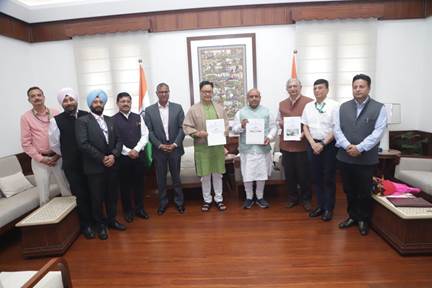
- 29 Mar 2025
In News:
The Delhi Legislative Assembly has become the 28th legislature in India to sign a tripartite Memorandum of Understanding (MoU) with the Ministry of Parliamentary Affairs (MoPA) and the Government of NCT of Delhi for implementing the National e-Vidhan Application (NeVA). This move marks a significant advancement in India's push for paperless, transparent, and efficient legislative processes.
About NeVA:
- Developed by: Ministry of Parliamentary Affairs
- Hosted on:Meghraj 2.0, India’s national cloud infrastructure
- Objective: To digitize legislative operations across State Legislatures and Union Territory Assemblies
- Vision: Aligned with the “One Nation, One Application” initiative
Key Features:
Feature Description
Device-Neutral Accessible via smartphones, tablets, laptops, and desktops
Real-Time Access Legislators can view agendas, bills, questions, committee reports, and proceedings anytime
Digital Repository Secure storage for legislative documents with confidentiality and integrity
Multilingual Support Facilitates linguistic inclusivity across India
Member-Centric Tools Access to member directories, notices, starred/unstarred Q&A, digital bulletins, and
house business
Public Interface Allows citizens and media to access legislative documents and updates
Smart Legislative Tools Aids Speakers/Chairs in conducting proceedings smoothly
Stakeholders Benefiting from NeVA:
- Members of Legislative Assemblies and Councils
- Government Ministers and Department Staff
- Assembly Secretariat Officials
- Media and General Public
Delhi’s Onboarding Highlights:
- Signed By: Ministry of Parliamentary Affairs, Delhi Legislative Assembly, and GNCTD
- Purpose: To empower Delhi MLAs with digital tools and reduce paper-based procedures
- Significance: Part of Delhi’s 100-day governance agenda aimed at modernization and transparency
Coeliac Disease
- 29 Mar 2025
In News:
Recent advancements in artificial intelligence (AI) may significantly accelerate the diagnosis of coeliac disease, an inherited autoimmune disorder triggered by gluten consumption. Researchers at the University of Cambridge have developed an AI-based tool capable of diagnosing the disease swiftly and accurately, potentially transforming current diagnostic practices.
What is Coeliac Disease?
- Nature: An inherited autoimmune disorder.
- Cause: Triggered by consumption of gluten, a protein found in wheat, barley, and rye.
- Mechanism: Gluten intake causes an immune reaction in the small intestine, damaging the intestinal lining (villi), leading to malabsorption of nutrients.
Key Symptoms:
- Gastrointestinal: Diarrhoea, bloating, stomach cramps, weight loss
- Systemic: Fatigue, anaemia, skin rashes
- In children: Impaired growth and development
- Long-term complications: Malnutrition, osteoporosis, infertility, anaemia, and increased risk of autoimmune diseases and certain cancers
Prevalence and Risk Factors:
- Affects approximately 1 in 100 people worldwide
- About 700,000 people in the UK live with the disease
- Individuals with a first-degree relative (parent, sibling, or child) with coeliac disease have a 1 in 10 risk
- It can develop at any age after gluten consumption begins
Diagnosis and Treatment:
- Current Diagnostic Method:
- Blood tests to detect gluten antibodies
- Duodenal biopsy to assess damage to villi (requires analysis by pathologists)
- Treatment: No cure; managed through a strict lifelong gluten-free diet
AI-Based Diagnostic Advancement:
- Development: By University of Cambridge researchers
- Function: The AI model analyses biopsy images to detect villous damage
- Training: Based on 4,000+ biopsy images from five hospitals using scanners from four manufacturers
- Efficiency: Matches the accuracy of expert pathologists, with diagnosis in under a minute
- Impact: Could eliminate delays caused by backlog in pathology labs and speed up diagnosis for patients
Significance of AI in Healthcare:
- Benefits:
- Faster diagnosis for patients
- Reduces burden on pathologists and NHS waiting lists
- Frees up time for pathologists to focus on more critical cases (e.g., cancer)
- Expert Support:Recognised by the Royal College of Pathologists as a tool with the potential to transform diagnostic pathology
- Future Requirements:
- Investment in digital pathology
- Integrated IT systems across health organisations
- Training for medical professionals in AI-based diagnostic tools
Bhadra Wildlife Sanctuary
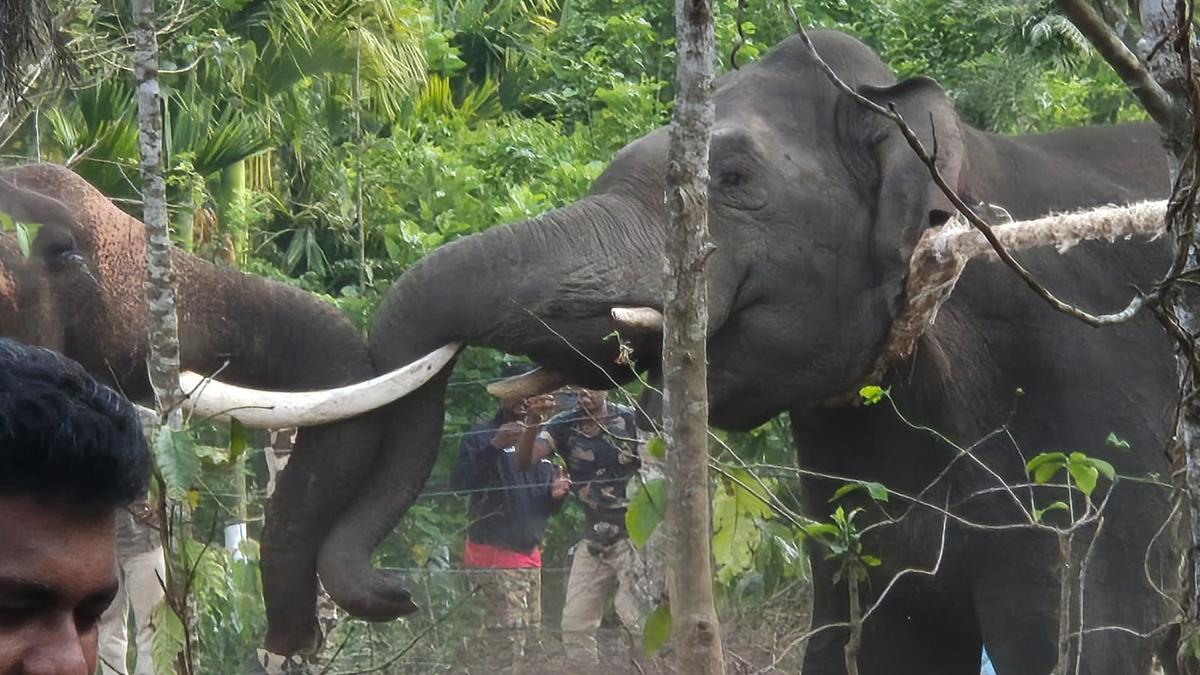
- 29 Mar 2025
In News:
Karnataka Forest Department has initiated a "soft release" strategy to address the escalating human-elephant conflict in the districts of Hassan, Chikkamagaluru, and Kodagu. The strategy involves the phased rehabilitation of captured elephants into the Bhadra Wildlife Sanctuary (BWS).
Soft Release Strategy – Key Highlights
- Objective: To rehabilitate conflict-prone wild elephants and reduce human-elephant encounters.
- Implementation Site:Bhadra Wildlife Sanctuary (BWS), Chikkamagaluru district.
- Initial Step: Captured elephants will be placed in a 20 sq. km enclosure within the sanctuary.
- Purpose of Enclosure:
- Acclimatisation to the wild.
- Health monitoring and behavioural assessment.
- Final Release: Once deemed fit, elephants will be released into one of four pre-identified zones in BWS, chosen based on:
- Availability of water and forage.
- Absence of human activity.
- Road connectivity.
Monitoring & Management
- The enclosure will be fenced using railway barricades.
- A dedicated team of veterinarians will supervise the elephants from a nearby veterinary centre.
- Minimal human interaction will be ensured during the acclimatisation period.
- Expert guidance is being provided by Prof. R. Sukumar (Indian Institute of Science) and senior forest officials.
About Bhadra Wildlife Sanctuary (BWS)
- Location: Western Ghats, Karnataka.
- Area: 492.30 sq. km.
- Also Known As:Muthodi Wildlife Sanctuary.
- Named After: Bhadra River.
- Status: A designated Project Tiger Reserve.
Ecological Significance
- Forest Types:
- Southern Moist Mixed Deciduous Forests.
- Dry Deciduous Forests.
- Shola Forests.
- Wildlife Diversity:
- Mammals: Tigers, leopards, elephants, gaurs, dholes, and deer.
- Birds: ~250 species, including endemic birds like Hornbills, Malabar Trogon, and Hill Myna.
Significance of the Initiative
- Biodiversity Conservation: Enhances protection of endangered species and habitats in the Western Ghats.
- Conflict Mitigation: Aims to provide a sustainable solution to frequent elephant incursions, crop damage, and human casualties.
- Model Strategy: Draws upon similar practices implemented in West Bengal and tailors them to Karnataka’s ecological conditions.
Gold Monetisation Scheme (GMS)
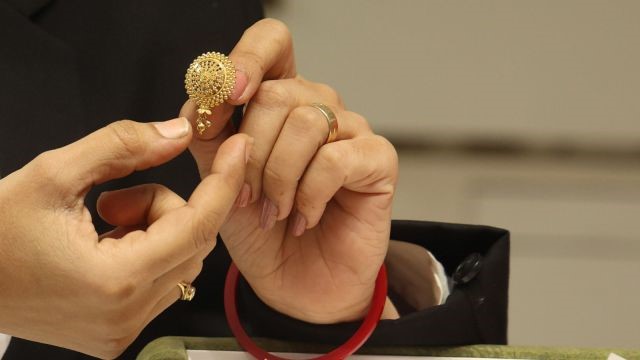
- 28 Mar 2025
In News:
The Government of India discontinued the Medium-Term and Long-Term Government Deposits (MLTGD) under the Gold Monetisation Scheme (GMS) with effect from March 26, 2025. Earlier, the Sovereign Gold Bond (SGB) scheme was also discontinued.
What is the Gold Monetisation Scheme (GMS)?
- Launched: 15th September 2015 (improved version of earlier Gold Deposit Scheme and Gold Metal Loan Scheme).
- Objective:
- Mobilize idle gold held by households and institutions.
- Bring privately held gold into the formal economy.
- Reduce the country's dependence on gold imports.
- Help lower the Current Account Deficit (CAD).
- Eligibility: Individuals, institutions, and government entities could deposit their idle gold in banks.
- Redemption:
- Gold is not returned in the same form (e.g., jewellery).
- Maturity proceeds are redeemed in the form of cash, gold bars, or coins (depending on the type of deposit).
Types of Deposits under GMS (Before Discontinuation of MLTGD):
- Short-Term Bank Deposit (STBD):
- Tenure: 1–3 years
- Interest Rate: Variable; decided by banks
- Redemption: Gold or cash
- Use: Lending by banks for domestic needs
- Medium-Term Government Deposit (MTGD):
- Tenure: 5–7 years
- Interest Rate: 2.25%; decided by Govt. in consultation with RBI
- Redemption: Cash only
- Use: Government and RBI reserves
- Long-Term Government Deposit (LTGD):
- Tenure: 12–15 years
- Interest Rate: 2.5%; decided by Govt. in consultation with RBI
- Redemption: Cash only
- Use: Monetary policy operations and reserves
Note: As of 2025, only the Short-Term Bank Deposit remains operational.
Sovereign Gold Bond (SGB) Scheme – Overview:
- Launched: 2015
- Objective:
- Reduce demand for physical gold.
- Promote investment in financial gold instruments.
- Channel household savings into productive financial assets.
- Key Features:
- Issued in denominations of 5g, 10g, 50g, and 100g.
- Tenure: 8 years (with exit option after 5 years).
- Interest Rate: 2.5% per annum (paid semi-annually).
- Capital gains tax exemption on maturity.
- Backed by the Government of India.
- Status: Discontinued as of 2025, alongside MLTGD and LTGD under GMS.
Other Gold-Related Initiative:
- Indian Gold Coin Scheme (2015):
- First-ever national gold coin with the Ashoka Chakra emblem.
- Launched alongside GMS and SGB to promote domestically branded gold and reduce reliance on imported gold bars/coins.
Parker Solar Probe

- 28 Mar 2025
In News:
Recently, the NASA’s Parker Solar Probe made another close approach to the Sun, reaching within 6 million km of its surface. It continues to break records as the closest any human-made object has come to the Sun, aiming to improve our understanding of solar activity and space weather.
Key Highlights:
- Background:Launched on August 12, 2018, by NASA from Cape Canaveral, Florida, the Parker Solar Probe is designed for in-situ study of the Sun's outer atmosphere (corona), solar wind, and magnetic field. It was named after physicist Eugene Parker, who first theorized the existence of the solar wind in the late 1950s.
- Mission Objectives:
- Investigate the structure and dynamics of the solar corona
- Understand the origin and evolution of solar wind
- Study energetic particles responsible for solar storms
- Examine the mechanisms that heat the corona to over a million degrees Celsius while the Sun’s surface remains relatively cooler at ~6,000°C
- Orbital Details & Speed:The Parker Probe moves in a highly elliptical orbit using Venus' gravity for repeated assists to get closer to the Sun. It is the fastest human-made object, reaching speeds of up to 692,000 km/hr. Its closest planned approach is 6.16 million km (3.83 million miles) from the Sun—about seven times closer than any previous spacecraft.
- Heat Protection Technology:To withstand extreme solar radiation, the probe uses an 8-foot-wide, 4.5-inch-thick carbon-carbon composite heat shield capable of resisting temperatures up to 1,377°C. The shield’s sun-facing side is coated with white ceramic paint to reflect sunlight, and its design ensures that just behind the shield, temperatures drop to a manageable 29°C, protecting the onboard instruments.
- Scientific Instruments Onboard:
- FIELDS – Measures electric and magnetic fields in the corona.
- ISoIS (Integrated Science Investigation of the Sun) – Studies high-energy solar particles.
- SWEAP (Solar Wind Electrons, Alphas, and Protons) – Captures data on solar wind particles.
- WISPR (Wide-Field Imager) – Takes images of the solar corona and heliosphere.
- Faraday Cup – An external device made of molybdenum alloy (melting point: 2,349°C), measures ion and electron densities in solar wind.
- Key Discoveries:
- First ‘Touch’ of the Sun (April 2021): The probe crossed the Sun’s Alfvén surface — the boundary where solar wind escapes the Sun’s influence — thus officially entering the solar corona.
- Magnetic Switchbacks: Detected sudden reversals in the Sun’s magnetic field direction, providing clues about how solar wind accelerates.
- Dust-Free Zones: Found regions near the Sun unexpectedly devoid of dust, challenging earlier theories about uniform dust distribution in the solar system.
- Corona Heating Mystery: Parker’s data, especially on Alfvén waves and magnetic switchbacks, may help solve why the corona is vastly hotter than the Sun’s surface
- Challenges Overcome:Contrary to expectations, the Sun’s gravity, not heat, posed a significant challenge. High speeds needed careful navigation to avoid crashing into the Sun. The mission used Earth and Venus flybys to gradually spiral inward for closer approaches rather than the initial, longer route via Jupiter.
- Mission Timeline:The Parker Solar Probe is scheduled to make 24 close passes of the Sun, continuing into the 2030s. Each pass provides new insights into solar activity and its potential impacts on Earth.
- Comparison with India’s Aditya-L1 Mission:While the Parker Solar Probe performs in-situ analysis by flying into the corona, ISRO’s Aditya-L1, launched in 2023, is stationed at the Lagrange Point 1 (L1), 1.5 million km from Earth. Aditya-L1 remotely observes solar flares, coronal mass ejections (CMEs), and magnetic storms using seven payloads, including a coronagraph.
IEA Global Energy Review 2025

- 28 Mar 2025
In News:
The world's energy demand grew at 2.2% in 2024, a pace described as "faster than average" by the International Energy Agency (IEA) in its Global Energy Review.
Key Highlights:
Global Energy Demand
- Global energy demand grew by 2.2% in 2024, faster than the average of the past decade.
- Emerging and developing economies accounted for over 80% of the increase, with Asia leading the growth.
- Electricity demand rose 4.3%, nearly double the past decade's average.
Rise of Renewables
- Renewables were the fastest-growing energy source, contributing 38% of global energy growth.
- A record 700 GW of renewable power capacity was added globally in 2024 (22nd consecutive annual record).
- Low-emission sources (renewables + nuclear) accounted for 80% of the increase in electricity generation.
Key Country Contributions:
- China added:340 GW solar and 80 GW wind (≈ two-thirds of global additions).
- India added:30 GW solar, triple the previous year's addition.
Global Renewable Generation (2024):
- Solar: +480 TWh
- Wind: +180 TWh
- Hydropower: +190 TWh (mainly due to favorable weather, not capacity increase)
Coal Trends:
- Coal demand rose 1%, reaching a record high in 2024.
- China derives 60% of its electricity from coal; India, about 75%.
- Coal’s global electricity share dropped to 35% – the lowest since the IEA's inception in 1974.
- The seaborne coal market is shrinking as top consumers are also top producers with domestic-use policies.
Natural Gas Outlook
- Natural gas demand rose 2.7%, hitting a record 115 billion cubic metres in 2024.
- Driven by:
- China's adoption of LNG trucks
- Heatwaves increasing power demand
- However, demand fell in late 2024 due to rising LNG spot prices, indicating price sensitivity in Asia.
Crude Oil Demand Slows
- Oil demand grew just 0.8%, mainly from the petrochemical sector.
- Transport-related oil use declined due to:
- Growth in electric vehicles (EVs) (especially in China)
- Expansion of LNG trucks and high-speed rail networks
About the International Energy Agency (IEA)
- Founded: 1974 (post-1973 oil crisis) by OECD nations.
- HQ: Paris, France.
- Members: 31 countries (only OECD nations can be full members); India is an association country.
- Mandate: Energy security, sustainability, and global cooperation.
- Key Reports: World Energy Outlook, India Energy Outlook, World Energy Investment Report, Global Energy Review.
Accelerated Glacier Loss in Hindu Kush Himalayas
- 28 Mar 2025
In News:
On World Day for Glaciers (March 21, 2025), the United Nations World Water Development Report 2025 revealed that glaciers globally are retreating at an alarming rate, with the Hindu Kush Himalaya (HKH) region witnessing the most severe impact — glacier loss accelerated by 65% between 2011–2020 compared to the previous decade.
Key Facts about Hindu Kush Himalaya (HKH) Region
- Geographical Spread: Extends over 3,500 km across 8 countries — Afghanistan, Bangladesh, Bhutan, China, India, Myanmar, Nepal, and Pakistan.
- Population Impact:
- 240 million people live in the HKH region.
- An additional 1.65 billion people downstream depend on its waters for drinking, agriculture, hydropower, and sanitation.
- Glacial Reservoir: Known as the “Third Pole” or “Water Tower of Asia”, the HKH stores more ice than anywhere outside the Arctic and Antarctic.
- River Systems: Source of 10 major river basins, including the Ganges, Indus, Brahmaputra, and Mekong.
Projected Glacier Loss (HKH and Global)
Temperature Rise (°C) HKH Glacier Volume Loss by 2100
1.5°C to 2°C 30%–50%
Above 2°C ~45% (from 2020 baseline)
- Global Glacier Loss: Mountain glaciers may lose 26%–41% of total mass globally by 2100, affecting 1.1 billion people in mountain regions.
Disaster Risks from Glacier Melt
- Glacial Lake Outburst Floods (GLOFs):
- Trigger flash floods and landslides.
- Have caused over 12,000 deaths globally in the past 200 years.
- In the HKH region alone, GLOFs are linked to over 7,000 deaths in the last 190 years.
- Risk of GLOFs may triple by 2100.
- Glacial Lakes: Rapid warming is expanding the number and area of glacier-fed lakes, increasing hazard potential.
Cryosphere and Climate Change
- Hydrological Changes: Melting glaciers alter water runoff patterns, with varied impacts across river basins — increasing monsoon runoff in some while reducing dry-season flows in others.
- Hydropower Challenges:
- Glacial melt initially boosts hydropower potential but may be offset by increased evaporation and reduced glacier mass over time.
- Many hydropower and cryptocurrency mining projects are unregulated and stress fragile mountain ecosystems.
- Mountain-Based Industries: Lithium mining in the Andes, for instance, uses up to 2,000 m³ of water per tonne, intensifying water stress.
Governance and Cooperation Gaps
- Weak Water Governance: Mountain regions, including the HKH, lack effective transboundary cooperation due to mutual distrust and poor data sharing.
- Transboundary Action Plan (HKH):
- Enhance cooperation at all levels.
- Prioritize rights and knowledge of mountain people.
- Limit global warming to 1.5°C.
- Fast-track SDG implementation in mountain areas.
- Strengthen ecosystem resilience and biodiversity.
- Promote regional data sharing and scientific collaboration.
UN Actions and Global Recognition
- International Year of Glacier Preservation (IYGP): 2025
- Decade of Action on Cryospheric Science: 2025–2034 — to advance global efforts in glacier conservation, data collection, and sustainable development in cryosphere-dependent regions.
IISc Study on Monsoon Cloud Bands and Rainfall Intensity
- 28 Mar 2025
In News:
A recent study by the Indian Institute of Science (IISc) has challenged the conventional understanding of monsoon dynamics by highlighting the critical role of cloud band strength in determining the movement and intensity of rainfall during the Indian monsoon season.
Key Findings of the Study:
- Strength Determines Propagation: Only strong equatorial cloud bands are capable of northward movement, initiating wet spells over the Indian subcontinent. Weak cloud bands fail to propagate, contradicting earlier models that assumed uniform northward movement.
- Role of BSISO: The Boreal Summer Intraseasonal Oscillation (BSISO) governs alternating wet and dry spells by transporting cloud bands from the equator to India. The duration and intensity of wet spells are influenced by the size and strength of these cloud bands.
- Air-Sea Interaction: Interaction between the equatorial Indian Ocean’s sea surface and atmosphere significantly influences moisture buildup and wind strength. A stronger ocean-atmosphere coupling enhances moisture transport, intensifying the monsoon.
- Impact of Climate Change:
- Warmer atmosphere → Increased background moisture.
- Future wet spells may see 42%–63% more rainfall over India and adjoining seas.
- Improving Forecast Models: These insights will enhance the accuracy of seasonal and sub-seasonal monsoon prediction models, crucial for agriculture and disaster preparedness.
Understanding BSISO (Boreal Summer Intraseasonal Oscillation)
- A dominant monsoon variability pattern active from June to September.
- Modulates ‘active’ (rainy) and ‘break’ (dry) phases of the monsoon.
- Moves cloud activity and convection from the Indian Ocean towards the Western Pacific.
- ENSO link:
- La Niña enhances BSISO propagation → stronger monsoon.
- El Niño suppresses it → weaker monsoon.
Key Facts about the Indian Monsoon
Aspect Details
Definition “Monsoon” comes from Arabic mausim meaning season.
Southwest Monsoon June–September; moist winds from Indian Ocean bring ~80% of India’s
annual rainfall.
Northeast Monsoon October–December; brings rain to Tamil Nadu, coastal Andhra Pradesh.
Key Drivers ITCZ shift, Tibetan heating, Tropical Easterly Jet, Somali Jet.
Oceanic Influences IOD (positive enhances, negative weakens monsoon), ENSO (El Niño
weakens,La Niña strengthens monsoon).
Monsoon Importance Critical for agriculture, water supply, economy; affects ~50% of India’s
population directly.
Rushikonda Beach Regains prestigious Blue Flag Certification
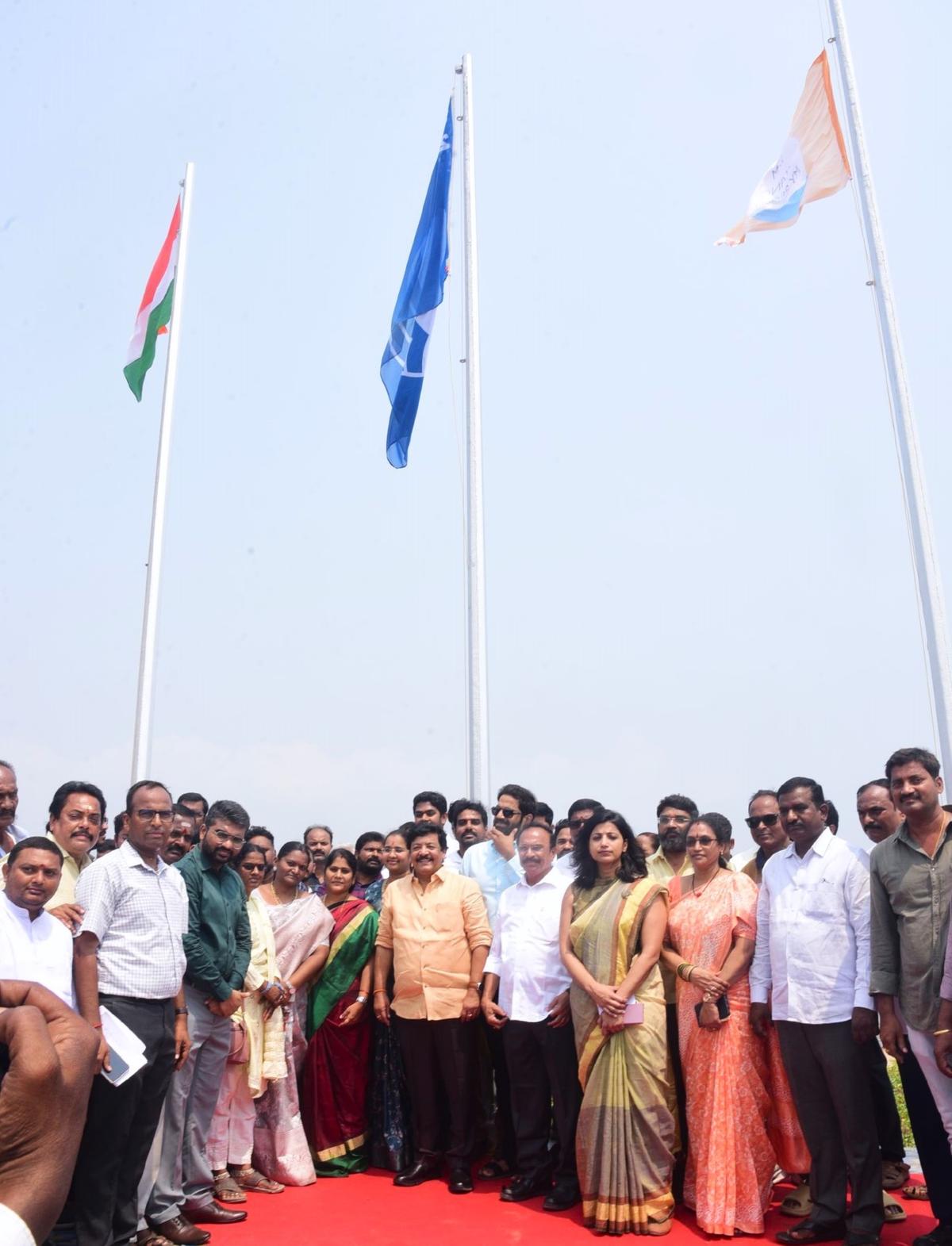
- 27 Mar 2025
In News:
Rushikonda Beach, located in Visakhapatnam, Andhra Pradesh, has successfully regained its Blue Flag certification after a temporary withdrawal due to non-compliance issues. It remains the only Blue Flag-certified beach in Andhra Pradesh and one of 13 such beaches in India.
What is the Blue Flag Certification?
- Administered by: Foundation for Environmental Education (FEE), Denmark.
- National Operator in India: Blue Flag India under the Society of Integrated Coastal Management (SICOM).
- Purpose: Recognizes beaches meeting strict standards of environmental management, safety, cleanliness, and facilities.
- Criteria: Beaches must comply with 33 environmental and safety criteria, including water quality, waste management, safety measures, and environmental education.
- Control Visits: National Operator conducts scheduled and surprise inspections.
Reasons for Temporary Withdrawal
- The Blue Flag tag was withdrawn after complaints of poor maintenance and non-compliance with amenities.
- Non-compliance types:
- Minor issues require rectification within 10 days.
- Multiple or major issues can lead to temporary or season-long withdrawal.
- Rushikonda Beach lost the tag for about two weeks before corrective measures were implemented.
Measures Taken for Regaining the Blue Flag
- Repair and upgrade of beach amenities.
- Plans to install bamboo fencing around the premises to protect the area.
- Public appeals to avoid littering and misuse.
- Education drives for local fisherfolk on beach cleanliness.
- Plans to promote tourism with new beach shacks and regulated alcohol sales, awaiting government approval.
- Identification of 10 other beaches in Andhra Pradesh for upgradation and Blue Flag certification.
Importance of the Blue Flag Tag for Rushikonda Beach
- Tourism Impact: The Blue Flag is internationally recognized by tourists as a mark of safety, cleanliness, and eco-friendliness.
- Environmental Awareness: Promotes responsible tourism and protects coastal ecosystems.
- Local Economy: Supports livelihoods of petty vendors and fisherfolk by attracting visitors.
Key Facts About Rushikonda Beach
- Location: Visakhapatnam, Andhra Pradesh.
- Awarded Blue Flag: First awarded in 2020.
- Features: Golden sands, clear waters, and well-maintained recreational amenities.
- Significance: The only Blue Flag beach in Andhra Pradesh and among 13 in India.
India’s First Frozen Zoo
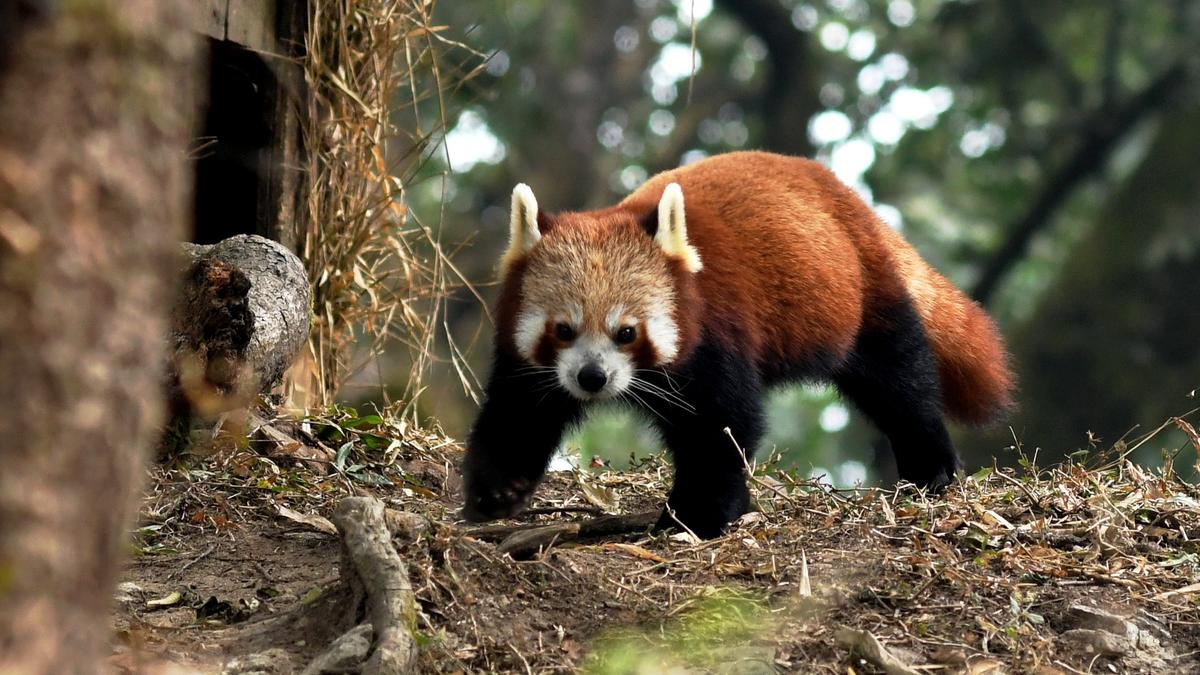
- 27 Mar 2025
In News:
In a pioneering conservation step, Padmaja Naidu Himalayan Zoological Park (PNHZP) in Darjeeling, West Bengal, has become India’s first zoo to launch a DNA cryogenic conservation project—popularly known as a “frozen zoo”.
About the DNA Cryogenic Conservation Initiative
- Objective: Preserve genetic material of endangered Himalayan species for future research, assisted reproduction, and biodiversity conservation in case of extinction threats.
- Launched in:2023, with 60 DNA samples already collected.
- Collaborators:
- PNHZP, Darjeeling
- Centre for Cellular and Molecular Biology (CCMB), Hyderabad
- Species covered: Red pandas, snow leopards, Himalayan black bears, and other native animals.
- Source of Samples: Tissue collected from animals deceased in captivity or road accidents.
- Storage Method:
- DNA samples stored in liquid nitrogen at –196°C.
- A dedicated in-zoo laboratory with steel cryo-containers established.
About the Centre for Cellular and Molecular Biology (CCMB)
- Established: 1977; full national lab status in 1981–82.
- Location: Hyderabad, Telangana.
- Affiliation: Under Council of Scientific and Industrial Research (CSIR).
- Recognition: Designated a “Center of Excellence” by UNESCO’s Global Molecular and Cell Biology Network.
- Mandate: Advanced research and training in frontier areas of modern biology.
About Padmaja Naidu Himalayan Zoological Park
Feature Description
Location Darjeeling, West Bengal
Altitude 2,150 metres (7,050 feet) – India’s highest-altitude zoo
Area 67.8 acres
Established 14 August 1958
Renamed 1975 in memory of Padmaja Naidu, former Governor of West Bengal
Transferred to State 1993; now under Ministry of Environment, Forest and Climate Change (MoEFCC)
Focus Areas Ex-situ conservation, education, research, and captive breeding
Notable Species Red pandas, snow leopards, Himalayan wolves, gorals, Siberian tigers
India’s First Indigenous MRI Scanner Installed at AIIMS
- 27 Mar 2025
In News:
AIIMS New Delhi is set to install India’s first indigenously developed MRI scanner for clinical evaluation by October 2025. This marks a major milestone under the government's push for import substitution and promotion of ‘Make in India’ in the medical device sector.
Key Highlights:
- MRI Type: 1.5 Tesla Magnetic Resonance Imaging (MRI) system.
- Developed by: SAMEER (Society for Applied Microwave Electronics Engineering and Research), an autonomous R&D institution under the Ministry of Electronics and Information Technology (MeitY).
- Initiative under: National Mission SCAN-ERA (Swadeshi Chumbakiya Anu-naadChitran – EkRashtriyaAbhiyaan), launched in December 2014.
- Purpose: Clinical evaluation and performance feedback at AIIMS to refine the system for wide-scale clinical use.
- Objective: Reduce dependence on imported diagnostic equipment and lower treatment costs.
Significance:
- Currently, 80–85% of India's medical devices are imported.
- In FY 2023–24, India’s medical device import bill rose by 13% to ?69,000 crore.
- The initiative aligns with the Production-Linked Incentive (PLI) Scheme for medical devices, under which 7 critical devices (including MRI machines, CT scanners, LINACs, heart valves, etc.) are now being domestically manufactured.
- 19 PLI-supported projects have been commissioned to manufacture 46 medical devices.
MRI: How It Works
- Principle: Uses strong magnetic fields and radiofrequency pulses to align protons in tissues. As protons return to their original alignment, they emit signals that are captured to create detailed 3D anatomical images.
- Applications:
- Imaging soft tissues, brain, spinal cord, joints, and internal organs.
- Detecting tumors, strokes, neurological disorders, and musculoskeletal injuries.
- Functional MRI (fMRI) maps brain activity during cognitive tasks.
Safety & Limitations:
- Magnetic interference: Risky for patients with implants (e.g., pacemakers).
- Noise: Loud clicking sounds may cause discomfort.
- Claustrophobia: May cause anxiety in closed spaces; open MRI designs mitigate this.
- Contrast agents: Use of gadolinium-based agents can pose risks to dialysis patients.
Disaster Management (Amendment) Bill, 2024
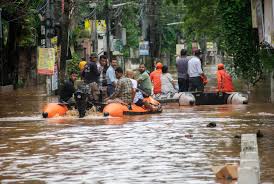
- 27 Mar 2025
In News:
The Parliament has passed the Disaster Management (Amendment) Bill, 2024, aiming to strengthen disaster response mechanisms.
Ministry: Home Affairs
Background
The Disaster Management Act, 2005 established a three-tier structure:
- National Disaster Management Authority (NDMA)
- State Disaster Management Authorities (SDMAs)
- District Disaster Management Authorities (DDMAs)
These bodies were responsible for disaster planning, mitigation, and response at national, state, and district levels respectively.
Key Amendments
1. Preparation of Disaster Management Plans
- Earlier: Executive Committees were responsible for preparing disaster plans.
- Now: NDMA and SDMA will directly prepare and approve national and state disaster management plans.
2. Expanded Functions of NDMA and SDMA
New responsibilities include:
- Periodic risk assessments, including risks from climate-related events.
- Technical guidance to lower-level authorities.
- Minimum standards of relief recommendations.
- Creation of disaster databases containing:
- Disaster risk profiles
- Fund allocations and expenditures
- Preparedness and mitigation strategies
- NDMA-specific roles:
- Assessment of state preparedness
- Post-disaster audits to evaluate response effectiveness
3. Urban Disaster Management Authorities (UDMAs)
- To be established in state capitals and municipal corporation areas.
- Composition:
- Chairperson: Municipal Commissioner
- Vice Chairperson: District Collector
- Additional members as per state government notification
- Responsible for urban disaster planning and implementation.
4. State Disaster Response Force (SDRF)
- States are empowered to establish SDRFs for specialized disaster response.
- Functions and service conditions to be defined by state governments.
5. Statutory Status to Key Committees
- National Crisis Management Committee (NCMC):
- Nodal body for major national disasters
- Chaired by the Cabinet Secretary
- High-Level Committee (HLC):
- Sanctions financial assistance to states
- Chaired by the concerned Union Minister
6. NDMA Staffing and Appointments
- NDMA can determine the number and type of officers and staff.
- Can appoint experts and consultants with prior central government approval.
Rationale Behind the Amendment
- Climate Change: Increased frequency of extreme weather events necessitates proactive strategies.
- Decentralization Gaps: States faced implementation challenges under the 2005 Act.
- Institutional Strengthening: Clearer roles for national and sub-national bodies.
- Technology and Data Integration: Emphasis on real-time data and performance audits.
Key Concerns and Criticism
- Centralization of Power:NDMA’s enhanced role may reduce state autonomy in disaster response.
- Overlap with State Authority:Potential encroachment on state disaster planning and fund utilization.
- Delayed Relief via NDRF:Increased central oversight may slow localized relief efforts.
- Omission of Emerging Threats:Excludes disasters like heatwaves from official definitions.
- Lack of State-Specific Relief Funds:Demand for region-focused financial provisions by states like Bihar.
Way Forward
- Ensure Federal Balance: Maintain cooperation between Centre and states.
- Update Definitions: Include climate-induced disasters like heatwaves.
- Transparent Funding Mechanism: Clear protocols for fund allocation and usage.
- Empower Local Bodies: Strengthen DDMAs and UDMAs through training and resources.
- Institutional Audits: Regular post-disaster audits to enhance future readiness.
FAO’s 3rd Report on the State of the World’s Plant Genetic Resources for Food and Agriculture (2025)
- 27 Mar 2025
In News:
The diversity of plant genetic resources for food and agriculture was under growing threat as despite 6,000 plant species cultivated, 60 per cent of the global crop production was alarmingly dependent on just nine crops, an important report by the United Nations Food and Agriculture Organization (FAO).
Key Highlights:
- Released by:Food and Agriculture Organization (FAO), under the Commission on Genetic Resources for Food and Agriculture (CGRFA-20).
- Crop Dependency & Diversity:
- 60% of global crop production is dependent on just 9 crops:Sugarcane, Maize, Rice, Wheat, Potatoes, Soybeans, Oil Palm Fruit, Sugar Beet, Cassava.
- Though 6,000 plant species are cultivated globally, there is a rising loss of genetic diversity, increasing vulnerability to climate shocks and food insecurity.
- Farmers’ Varieties / Landraces (FV/LRs):
- Traditional crop varieties adapted to local conditions, offering greater resilience to climate, pests, and diseases.
- Globally, 6% of FV/LRs are threatened; this figure exceeds 18% in some regions like Southern Africa, the Caribbean, and Western Asia.
- In India, over 50% of FV/LRs across five agro-ecological zones are at risk of extinction.
- Conservation Efforts
- In-situ (on-farm): Around 35 million hectares in 51 countries are under cultivation with FV/LRs.
- 42% of plant taxa are threatened at species or varietal level.
- Ex-situ (off-farm):
- Over 5.9 million accessions preserved globally.
- Many stored in the Svalbard Global Seed Vault.
- Conservation is constrained by funding, political support, infrastructure, and skilled personnel shortages.
- In-situ (on-farm): Around 35 million hectares in 51 countries are under cultivation with FV/LRs.
India-Specific Initiative
- Seed Hub Initiative (2016) by the Ministry of Agriculture:
- Aimed at promoting high-yielding varieties (HYVs) of pulses.
- Resulted in increased production from 14.76 million tonnes (2007–08) to 24.42 million tonnes (2020–21).
Impact of Climate Change
- Increasing frequency of extreme weather events threatens crop diversity.
- Countries lack mechanisms to assess disaster impacts on crop genetics.
- Post-disaster germplasm distribution often suffers due to poor seed adaptation to local agro-climatic and cultural contexts.
Key Challenges
- Genetic erosion due to monoculture, urbanization, and climate stress.
- Underfunded gene banks and weak institutional capacity.
- Lack of trained plant genetic experts and documentation gaps.
- Limited access to locally adapted seeds, especially post-disaster.
Way Forward
- Integrate in-situ and ex-situ conservation with community participation.
- Enhance funding and explore public-private partnerships.
- Build capacity in taxonomy, plant breeding, and genebank management.
- Promote participatory breeding with farmers and Indigenous communities.
- Strengthen policy support for crop diversification and climate-resilient agriculture.
About CGRFA
- Established: 1983 by FAO.
- Mandate: Only intergovernmental body focusing on sustainable use of agricultural biodiversity.
- Membership: 179 countries + European Union.
- Major Achievement:Instrumental in adoption of International Treaty on Plant Genetic Resources for Food and Agriculture (ITPGRFA), 2001.
Abolition of Equalisation Levy on Online Advertisements
- 26 Mar 2025
In News:
The Indian government has proposed to abolish the Equalisation Levy (digital tax) on online advertisements, effective April 1, 2025. This move is set to benefit digital advertisers on platforms like Google, Meta (formerly Facebook), and X (formerly Twitter), reducing their tax burden.
Overview of Equalisation Levy
- Introduction:
- The Equalisation Levy was introduced by the Finance Act of 2016. Its primary objective was to tax foreign digital service providers (such as Google, Meta, etc.) for income generated from digital transactions in India, ensuring these businesses contribute fairly to India’s tax system, despite having no physical presence.
- Coverage:
- Initially, the levy applied to online advertising services, imposing a 6% tax on payments made to non-resident providers. This was later expanded in 2020 to include e-commerce transactions, imposing a 2% levy on revenues from e-commerce operations. The e-commerce levy was abolished in August 2024.
- Conditions: The levy is applicable if:
- The payment is made to a non-resident service provider.
- The annual payment to the service provider exceeds Rs. 1 lakh in a financial year.
- Exclusions:
- If the non-resident service provider has a permanent office in India or if the income qualifies as royalties or technical services fees, it is not subject to the levy.
- Transactions under Rs. 1 lakh or involving exempt income under Section 10(50) are not taxed under the Equalisation Levy.
Key Reasons for Abolishing the Equalisation Levy
- Improved Tax Relations with the US: The levy has been a point of contention, particularly with the US, which threatened retaliatory tariffs. The move to abolish the 6% levy is seen as a step to improve trade relations and avoid escalation of trade disputes.
- Simplification of Tax Laws: Experts believe that removing the levy aligns with India’s broader efforts to simplify and streamline its tax legislation, making it easier for digital service providers to operate within the country.
- Addressing Global Concerns: The proposal to remove the levy is also in response to concerns raised by partner nations, like the US, about the unilateral nature of the tax. This step aims to reduce friction and maintain smoother diplomatic and trade ties.
Implications of the Abolition of the Equalisation Levy
- Reduced Costs for Advertisers: The removal of the 6% tax will lower the financial burden on advertisers in India who use platforms like Google, Meta, and X. This is expected to encourage more investment in digital advertising and benefit the broader digital economy.
- Enhanced Competitiveness: By removing the levy, India aims to create a more level playing field for both domestic and foreign companies involved in digital advertising, fostering fairer competition.
- Impact on International Relations: The decision could help defuse trade tensions, particularly with the US, and might avoid reciprocal tariffs that could affect Indian companies operating internationally.
- Tax Revenue Implications: While the abolition may result in short-term revenue loss from the digital services sector, it is anticipated that the long-term benefits from increased digital advertising spending and improved international relations will outweigh the initial loss.
Future Outlook
- Monitoring and Adjustments: While the government has moved to abolish the Equalisation Levy, experts suggest that further monitoring and analysis of digital taxation might be required, especially considering global trends and the evolving digital economy. The impact of this abolition on India’s digital tax landscape will need to be observed closely.
- Diplomatic Measures: Along with the abolition of the levy, the government continues to pursue diplomatic efforts to ensure fair trade practices and avoid potential retaliatory measures by foreign nations.
Permafrost Degradation in the Kashmir Himalayas
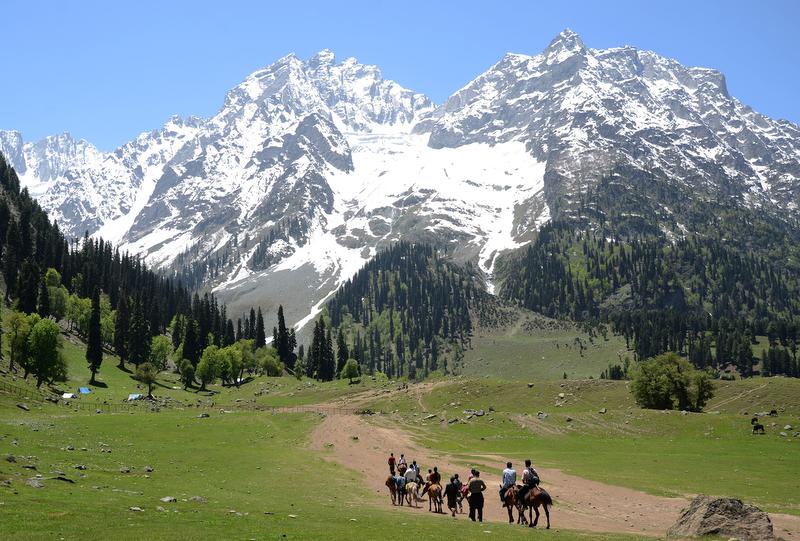
- 26 Mar 2025
In News:
Permafrost, the ground that remains frozen for at least two years, has long been a critical feature in high-altitude regions like the Kashmir Himalayas. Recent studies have highlighted that melting permafrost is emerging as a significant environmental threat, with the potential to disrupt both ecological systems and infrastructure in the region.
Key Findings of Recent Studies
- Extent of Permafrost: Permafrost covers 64.8% of Jammu & Kashmir (J&K) and Ladakh, with 26.7% being continuous, 23.8% discontinuous, and 14.3% sporadic.
- Regional Distribution: Ladakh has the highest concentration of permafrost (87%), while areas like the Shigar Valley and Siwaliks have no permafrost.
- Impact on Infrastructure: Permafrost degradation threatens key infrastructure, including roads, settlements, and hydropower projects. Approximately 193 km of roads, 2,415 households, and eight hydropower projects are at risk due to thawing permafrost.
- Glacial Lake Outburst Floods (GLOFs): Permafrost thaw increases the likelihood of GLOFs, as seen in recent events like the 2021 Chamoli disaster and the 2023 South Lhonak GLOF. These floods, triggered by the instability of glacial lakes formed by melting ice, can cause significant destruction.
Environmental Impacts of Permafrost Thawing
- Carbon Release: As permafrost melts, it releases stored organic carbon, including methane, a potent greenhouse gas that exacerbates climate change.
- Hydrological Changes: Thawing permafrost can alter river flow and groundwater availability, impacting water resources for local communities and ecosystems.
- Geological Instability: The breakdown of permafrost leads to landslides and slope instability, posing risks to both natural landscapes and human settlements.
Factors Contributing to Permafrost Degradation
- Global Warming: Rising surface temperatures are the primary driver of permafrost thaw.
- Human Activities: Construction activities, including road-building, dam construction, and real estate development, disturb the stability of permafrost. Additionally, deforestation and land-use changes increase the exposure of permafrost to solar radiation, accelerating its degradation.
- Natural Events: Earthquakes and natural processes, like rock-ice avalanches, also contribute to the destabilization of permafrost.
Risks to Local Communities and Infrastructure
- Vulnerable Regions: Thousands of households and critical infrastructure in permafrost-rich areas, such as Ladakh, are at risk due to permafrost thawing. Military and strategic infrastructure, including roads vital for connectivity, may face serious disruptions, compromising national security.
- Glacial Lake Outburst Floods (GLOFs): The melting of glaciers can lead to the formation of proglacial lakes, increasing the risk of GLOFs. In J&K, 332 such lakes have been identified, with 65 showing significant flood risks. GLOFs are a major threat to downstream communities and infrastructure.
Way Forward: Mitigating Risks
- Integrated Planning: Future infrastructure development, especially roads and hydropower projects, should incorporate data on permafrost zones. Risk-sensitive land-use planning and construction methods must be adopted to minimize environmental damage.
- Enhanced Monitoring: Remote sensing technologies, including satellite-based monitoring and ground-based LiDAR systems, should be employed to track permafrost degradation and associated environmental changes more effectively.
- Comprehensive Environmental Assessments: Environmental Impact Assessments (EIAs) must be strengthened to include the risks of permafrost thawing, particularly in relation to GLOFs, landslides, and groundwater depletion. This is crucial for ensuring that development projects in these regions do not exacerbate the environmental risks posed by permafrost degradation.
Targeted Species Conservation
- 26 Mar 2025
In News:
A major global study published in PLOS Biology (March 2025) has reaffirmed that targeted species-specific conservation measures are critical in reversing biodiversity loss and preventing extinctions. Despite the ongoing biodiversity crisis, where six times more species are declining than improving, the study found that where conservation efforts were applied, results were overwhelmingly positive.
Analyzing over 67,000 animal species from the IUCN Red List, researchers from institutions including the University of Cambridge, IUCN, and BirdLife International discovered that 99.3% of species that improved in threat status since 1980 had benefitted from conservation interventions, such as habitat protection, reintroduction, breeding programmes, and legal protections. Of the 969 species with globally increasing populations, 78.3% were under active conservation.
Notable global success stories include:
- Iberian Lynx: Rebounded from a few hundred to several thousand through breeding and habitat restoration.
- K?k?p? (New Zealand parrot): Revived via intensive monitoring and predator control.
- European Bison: Successfully reintroduced in Eastern Europe after extinction in the wild.
- Marine species such as humpback and blue whales also recovered after international moratoriums on whaling.
Island ecosystems like New Zealand, Mauritius, and the Seychelles showed the highest concentration of species recovery, while decline hotspots included the Tropical Andes, Sumatra, Malaysia, and Borneo.
Despite these successes, the study cautions that since 1980, 1,220 species of birds, mammals, and amphibians have deteriorated in Red List status compared to only 201 species that improved.
Causes include habitat loss, pollution, overexploitation, climate change, invasive species, and disease.The study called for landscape-scale conservation and ambitious implementation of Goal A of the Kunming-Montreal Global Biodiversity Framework to halt extinction risk and restore resilient populations.
India’s Species-Specific Conservation Efforts
India has adopted a multi-pronged species-specific conservation approach, primarily under the Integrated Development of Wildlife Habitats (IDWH), 2008, which continues under the 15th Finance Commission (2021–26). The scheme focuses on critically endangered species through captive breeding, habitat restoration, and community participation.
Key initiatives include:
- Species Recovery Programme: Prioritizes 22 species (16 terrestrial and 6 aquatic) for focused conservation.
- Project Tiger (1973) and Project Elephant (1992): Flagship conservation efforts for apex species.
- Project Crocodile: Initiated post-Wildlife (Protection) Act, 1972, supported by the UN. Saltwater crocodiles in Bhitarkanika increased from 95 (1975) to 1,811.
- Sea Turtle Conservation Project (1999): Focuses on Olive Ridley Turtles, listed as Vulnerable (IUCN), Schedule I (WLPA), and Appendix I (CITES).
- Vulture Action Plan 2020–25: Aims to eliminate diclofenac use and protect food sources for vultures. India's first Vulture Conservation and Breeding Centre (VCBC) was set up in Pinjore, Haryana.
- Indian Rhino Vision 2020: Increased the Greater One-Horned Rhinoceros population in Kaziranga National Park to over 2,600 (2022).
- Project Cheetah (2022): Reintroduces cheetahs extinct in India since 1952, with cheetahs from Namibia and South Africa released in Kuno National Park. India saw its first wild cheetah birth in 2023 after 75 years.
- Maharashtra’s Pangolin Action Plan: The first dedicated plan for pangolin conservation. Pangolins are listed under Schedule I of the WLPA, receiving the highest level of protection.
Revival of Vikramshila University
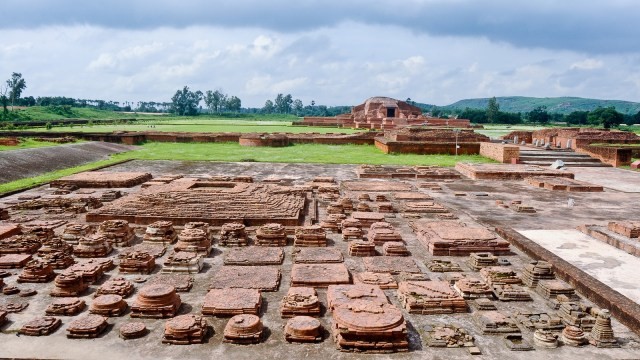
- 26 Mar 2025
In News:
Following the revival of Nalanda University, another historic centre of learning—Vikramshila University in Bihar—is now set for rejuvenation. The Archaeological Survey of India (ASI) began developing the site in December 2023 to boost heritage tourism. Simultaneously, the Bihar government has earmarked 202.14 acres of land in Antichak village, Bhagalpur district, for setting up a Central University at the ancient site.
The revival project was approved by the Central Government in 2015 with a sanctioned budget of ?500 crore. However, work was delayed due to issues in land acquisition. With recent approval of ?87.99 crore for land procurement and the identification of suitable land, the project has regained momentum. The site is located about 3 km from the ancient ruins of the original university.
Historical Background:
- Vikramshila University was founded in the late 8th or early 9th century AD by King Dharmapala of the Pala Dynasty as a response to declining academic standards at Nalanda.
- Situated along the banks of the Ganges in eastern India, Vikramshila emerged as a major hub of Tantric Buddhism (Vajrayana) and occult studies, distinguishing itself from the broader curriculum of Nalanda.
- During its peak, Vikramshila housed over 1,000 students and 100 teachers, many of whom came from other parts of India and abroad.
- The university became renowned for its scholarship in theology, logic, metaphysics, grammar, philosophy, and especially tantric studies, which were popular in both Buddhism and Hinduism during that era. Among its most prominent scholars was AtisaDipankara, who played a key role in the spread of Buddhism to Tibet.
- The university featured a central cruciform brick stupa surrounded by 208 monk cells, arranged symmetrically on all four sides. A major architectural marvel of the site is its library, which had an innovative cooling system where water from a nearby reservoir was used to preserve manuscripts. This reflects the advanced engineering and scholarly focus of the institution.
- Although Nalanda and Vikramshila were separate entities, they often collaborated and shared scholars under the patronage of King Dharmapala. At one point, Vikramshila even held administrative authority over Nalanda.
Decline:
Vikramshila flourished for nearly four centuries before being destroyed around 1203 AD during the invasions of Muhammad Bin Bakhtiyar Khalji, the same event that marked the end of Nalanda University. The decline was also contributed to by the waning influence of Buddhism in India and the rise of Hinduism.
Recent Initiatives:
The ASI has divided the Vikramshila ruins into grids for careful excavation and preservation. A museum at the site displays several important antiquities, including sculptures of Buddhist and Hindu deities like Avalokiteshvara, Loknath, Surya, Vishnu, Ganesh, and more. Restoration work is also underway on NH-80, which connects Vikramshila to Bhagalpur city, about 50 km away.
Indian Ocean Ship (IOS) Sagar & AIKEYME
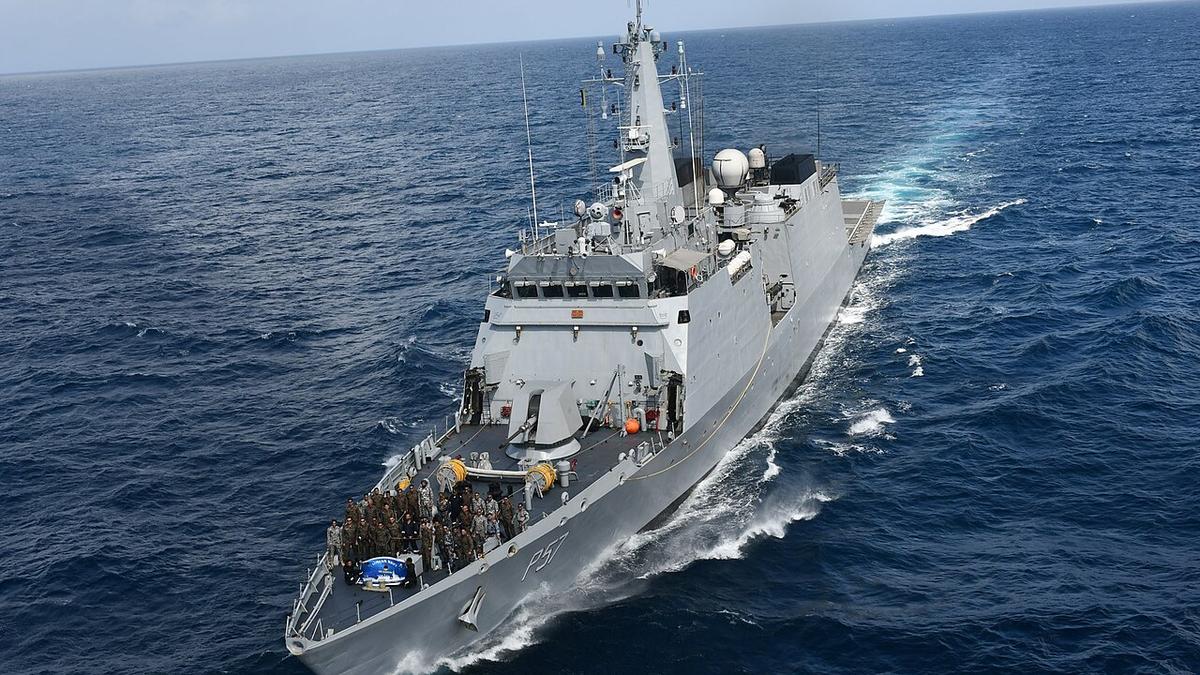
- 26 Mar 2025
In News:
India’s Maiden India-Africa Naval Exercise: Indian Ocean Ship (IOS) Sagar & AIKEYME.
Indian Ocean Ship (IOS) Sagar
- Launched: April 5 – May 8, 2025
- Vessel: INS Sunayna (Offshore Patrol Vessel)
- Objective: Maritime security cooperation in the Southwest Indian Ocean Region (IOR)
- Participants:India + 9 African & IOR nations:Comoros, Kenya, Madagascar, Maldives, Mauritius, Mozambique, Seychelles, Sri Lanka, and South Africa
- Activities:
- Port Visits: Dar-es-Salaam (Tanzania), Nacala (Mozambique), Port Louis (Mauritius), Port Victoria (Seychelles), Male (Maldives)
- Joint EEZ Surveillance: With Tanzania, Mozambique, Mauritius, and Seychelles
- Training: Personnel from participating countries trained at Indian naval institutions in Kochi on operations, navigation, and maritime security
AIKEYME (Africa-India Key Maritime Engagement)
- Meaning: "Unity" (from Sanskrit)
- Type: First Multilateral Naval Exercise between India and African nations
- Duration: Six days in mid-April 2025
- Co-hosts: Indian Navy and Tanzania People's Defence Force (TPDF)
- Inauguration: By Indian Defence Minister at Dar-es-Salaam, Tanzania
- Participants:India + 10 African nations:Comoros, Djibouti, Eritrea, Kenya, Madagascar, Mauritius, Mozambique, Seychelles, South Africa, Tanzania
- Exercise Phases:
- Harbour Phase:
- Table-top exercises
- Command post exercises on piracy and information sharing
- Training in Seamanship and Visit, Board, Search & Seizure (VBSS)
- Sea Phase:
- Maritime security drills
- Search and Rescue (SAR)
- Small arms firing
- Helicopter operations
- Harbour Phase:
Strategic Context & Broader Framework
SAGAR (Security and Growth for All in the Region) – 2015
- Aim: Promote a free, open, inclusive and secure Indo-Pacific
- Key Pillars:
- Countering China's influence in the region
- Enhancing maritime security (anti-piracy, anti-terrorism)
- Capacity building in disaster management and infrastructure
- Promoting regional economic and connectivity projects
MAHASAGAR Initiative
- Announced by PM Modi in Mauritius
- Stands for Advancement for Security Across the Regions
- Focuses on bolstering maritime security partnerships across the Indian Ocean
Key Supporting Indian Initiatives
- Mission SAGAR: Delivered COVID-19 aid to Indian Ocean nations
- Vaccine Maitri: Supplied vaccines to neighbours like Maldives and Bhutan
- South Asia Satellite: Enhanced communication & disaster response
- Kaladan Multi-Modal Transit Project: Boosted India-Myanmar-Southeast Asia connectivity
India to Host FATF Private Sector Collaborative Forum 2025 in Mumbai
- 25 Mar 2025
In News:
- India will host the FATF Private Sector Collaborative Forum (PSCF) 2025 in Mumbai from March 25-27, 2025. This event will focus on global priorities such as payment transparency, financial inclusion, and the digital transformation of financial systems.
- The forum will be a critical platform for addressing the evolving challenges of money laundering and terrorist financing through the use of digital tools and enhanced transparency.
Key Agenda
The discussions at PSCF 2025 will revolve around tackling contemporary financial crimes, including those linked to cryptocurrency-related laundering. Key topics will include:
- Strengthening Anti-Money Laundering (AML) and Counter-Terrorist Financing (CFT) compliance mechanisms.
- Promoting financial inclusion through risk-based supervision of regulated entities.
- Enhancing transparency in beneficial ownership and using digital tools to bolster AML/CFT measures.
- Addressing emerging risks, including terrorist financing and proliferation financing.
The forum will also assess how the private sector can enhance information-sharing practices to address these threats more effectively.
About FATF
The Financial Action Task Force (FATF), established in 1989 during the G7 Summit in Paris, is an intergovernmental body that sets international standards to combat money laundering and terrorist financing. The FATF’s mission is to develop policies, establish guidelines, and promote global cooperation to mitigate the financial risks associated with these crimes.
- Headquarters: Paris, France.
- Membership: FATF has 39 member countries, including major economies such as the United States, India, China, Saudi Arabia, Germany, and theEuropean Union.
- Regional Bodies: In addition to its direct members, FATF affiliates over 180 countries through FATF-Style Regional Bodies (FSRBs) like the Asia Pacific Group (APG) and the Eurasian Group.
- FATF Recommendations are recognized as the global standard for AML/CFT measures.
FATF evaluates countries' efforts to comply with these standards, providing assessments and promoting policy changes to counteract financial crimes. Countries that fail to comply may be placed on the grey list or blacklist.
FATF Grey and Black Lists
Countries that fail to meet FATF standards are placed on one of two lists:
- Black List: Countries known as Non-Cooperative Countries or Territories (NCCTs), which directly support terrorist financing and money laundering. North Korea, Iran, and Myanmar are currently on this list.
- Grey List: Countries considered at risk of supporting financial crimes but not yet fully engaging in those activities. Being on the grey list serves as a warning, with the risk of moving to the blacklist if improvements are not made.
Countries on the blacklist face severe international sanctions, including restrictions on financial aid and economic interactions from organizations like the IMF, World Bank, and Asian Development Bank.
India's Role in FATF
India became a member of FATF in 2010 and has made significant strides in improving its AML/CFT frameworks. In 2024, FATF acknowledged India’s efforts towards anti-money laundering and countering terrorist financing, placing it in the "regular follow-up" category for continued compliance.
The upcoming PSCF 2025 will be a milestone in India’s ongoing commitment to global financial security, as it seeks to enhance international collaboration and discuss innovative ways to address evolving threats in financial crimes.
Global Environmental Data Strategy (GEDS)
- 25 Mar 2025
In News:
- The Global Environmental Data Strategy (GEDS), spearheaded by the United Nations Environment Programme (UNEP), is a comprehensive framework designed to address the triple planetary crises of climate change, pollution, and biodiversity loss.
- GEDS aims to leverage high-quality, accessible environmental data to support informed decision-making, foster innovative digital solutions, and promote sustainable development.
- The strategy is currently under development, with UNEP working to finalize it by December 2025. It emphasizes overcoming barriers such as data fragmentation, lack of interoperability, and limited access, which hinder the effective use of environmental data.
Key Focus Areas of GEDS
The GEDS framework is built around five key pillars that focus on overcoming challenges and unlocking the potential of environmental data:
- Data Quality and Provenance:
- Establishing standardized frameworks and mechanisms to classify and ensure the accuracy of environmental data.
- Focusing on data quality and developing systems to trace its origin (provenance).
- Data Governance:
- Promoting ethical and sustainable methodologies for managing environmental data.
- Developing governance models to ensure data is managed in a transparent and responsible way.
- Data Interoperability:
- Federating global and thematic data standards to allow seamless data sharing and integration.
- Ensuring that data across different platforms and systems can communicate with each other, facilitating better collaboration.
- Inclusive Data Access:
- Ensuring open, affordable, and machine-readable access to environmental data for all stakeholders.
- Addressing issues related to data discoverability and making data AI-ready to foster innovative solutions.
- Capacity-Building:
- Enhancing the skills and knowledge needed for effective data collection, governance, and use.
- Focusing on strengthening global initiatives, particularly in the Global South, to improve data management capabilities and foster inclusive participation.
Significance of GEDS
- Tackling Environmental Crises: GEDS provides a data-driven approach to addressing the challenges of climate change, pollution, and biodiversity loss, aligning with global efforts to achieve the UN Sustainable Development Goals (SDGs).
- Supporting Informed Decision-Making: By ensuring the availability of high-quality environmental data, GEDS helps governments, organizations, and communities make evidence-based decisions that are crucial for environmental sustainability.
- Fostering Innovation: The strategy facilitates the development of AI and data analytics tools to create innovative solutions for environmental management and protection.
- Global Collaboration: By promoting international cooperation and sharing of environmental data, GEDS aims to improve global collaboration to combat environmental challenges.
Urban Heat Island Effect in Hyderabad
- 25 Mar 2025
In News:
The Telangana Socio-Economic Outlook 2025 highlights a concerning rise in night-time temperatures in Hyderabad, attributed to the Urban Heat Island (UHI) effect. This growing urban microclimatic issue has critical public health and environmental implications.
What is Urban Heat Island (UHI)?
- Definition: UHI is a climatic phenomenon where urban areas record significantly higher temperatures than surrounding rural or peri-urban regions, particularly at night.
- Cause: Result of urbanization and human activities that alter land surfaces and trap heat.
Key Factors Contributing to UHI
- Reduced green cover: Shrinking vegetation limits natural cooling via shade and evapotranspiration.
- High density of concrete structures: Buildings and roads absorb solar radiation during the day and release heat slowly at night.
- Urban layout: Tall buildings and narrow streets trap warm air, reducing air circulation.
- Anthropogenic heat: Emissions from vehicles, air conditioners, and industries contribute to localized warming.
- Surface characteristics: Dark tarred roads absorb more heat and release it at night, worsening night-time UHI.
Hyderabad Case Study: Telangana Socio-Economic Outlook 2025
- Temperature Difference:
- Night-time: Core city is 1.9°C warmer than surrounding peri-urban and outer zones.
- Daytime: Interestingly, the core is 0.7°C cooler due to shade from tall buildings.
- Peak UHI Season: March to August.
- Most Affected Zones: High-rise, concrete-dense city centers with low vegetation.
Health Impacts of UHI
According to medical experts:
- Physical Effects:
- Heat exhaustion & heat strokes
- Dehydration, skin issues
- Cardiovascular and kidney stress
- Vulnerable Groups: Elderly, children, and those with pre-existing conditions.
- Biological Mechanism: Prolonged exposure increases pro-inflammatory cytokines, leading to immune suppression and chronic fatigue.
- Mental Health: UHI contributes to sleep disturbances, psychological stress, and anxiety.
Government Response
- Clean and Green Energy Policy 2025: Telangana aims to promote cooler, greener cities.
- Recommended Actions:
- Interdisciplinary collaboration among urban planners, healthcare professionals, and community experts.
- Urban design incorporating green infrastructure and heat-resilient materials.
World Water Day 2025
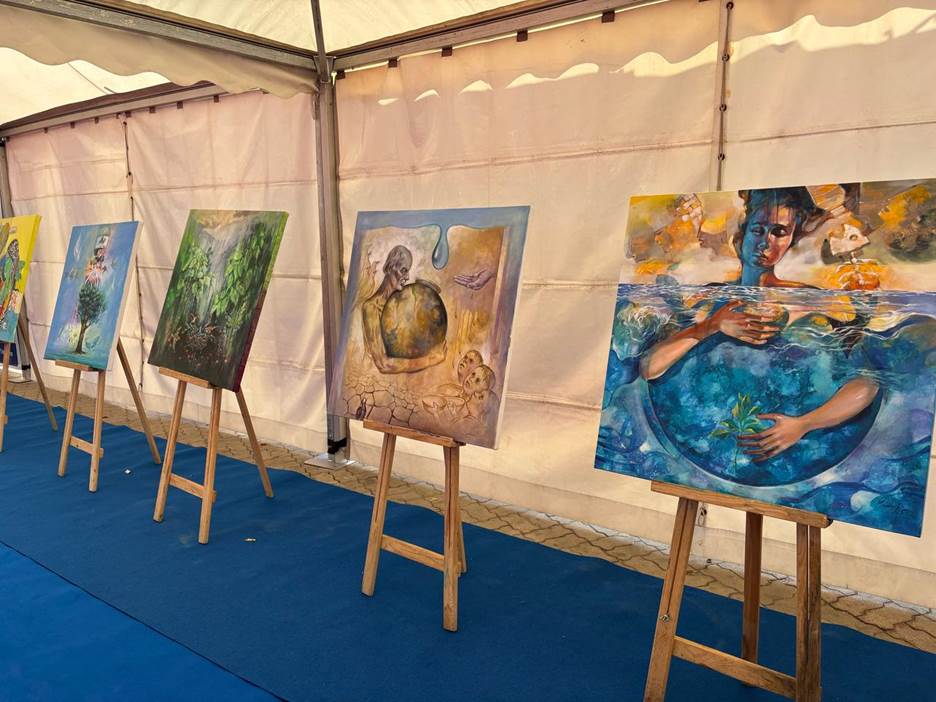
- 25 Mar 2025
In News:
Marking World Water Day, the Ministry of Jal Shakti, in collaboration with the Ministry of Environment, Forest & Climate Change and the Government of Haryana, launched the much-anticipated sixth edition of Jal Shakti Abhiyan: Catch the Rain - 2025 in Panchkula, Haryana.
World Water Day 2025
- Observed On: 22nd March 2025
- 2025 Theme: ‘Glacier Preservation’
- Global Context: Declared by the United Nations General Assembly in 1993, conceptualized at the 1992 Rio Earth Summit.
- Linked SDG: Sustainable Development Goal 6 (SDG-6) – Clean Water and Sanitation for All by 2030.
- Purpose: To raise global awareness on water conservation and promote sustainable water use.
India's Observance: Launch of Jal Shakti Abhiyan – Catch the Rain 2025
- Launched by: Ministry of Jal Shakti, in collaboration with Ministry of Environment, Forest and Climate Change (MoEFCC) and Government of Haryana.
- Launch Venue: Panchkula, Haryana (first time outside Delhi).
- Theme: “????????????????: ??????????????” (People’s Action for Water Conservation – Towards Intensified Community Connect).
- Focus Areas:
- Rainwater harvesting
- Groundwater recharge
- Community-led water conservation
- Ecological restoration (forests, rivers, springs)
Key Campaigns & Initiatives
Jal Shakti Abhiyan: Catch the Rain 2025 (JSA:CTR)
- Targeted Districts: 148 water-stressed districts across India.
- Tagline: “Catch the Rain where it falls, when it falls.”
- Objective: Promote localized water conservation through people’s participation and decentralized planning.
“Jal-Jangal-Jan” Abhiyan
- Aim: Restore ecological connectivity between water, forests, and communities.
- Collaborators: MoEFCC and Jal Shakti Ministry.
- Tools Used: Awareness videos, AV content, best practice compilations.
State-Level Innovations: Haryana Model
- Launched:
- Mukhyamantri Jal Sanchay Yojana – Enhancing water harvesting through community participation.
- Water Resources Atlas – Scientific mapping of water availability.
- Online Canal Water Management System – Real-time irrigation data for efficiency.
- E-booklet on Integrated Water Resources Management.
- Infrastructure Projects under SBM-G & JSA:
- Community Sanitary Complexes
- Solid & Liquid Waste Management
- Gobardhan (Biogas) Projects
- Borewell Recharge Systems
- Micro-irrigation and Rainwater Harvesting Projects
Key Government Schemes Related to Water
- Jal Shakti Abhiyan (JSA) – Time-bound, mission-mode campaign for water conservation.
- Atal Bhujal Yojana – Participatory groundwater management in critical areas.
- AMRUT 2.0 – Urban water supply and sewerage services improvement.
India and the Indian Ocean Rim Association (IORA)
- 25 Mar 2025
In News:
Charting a route for IORA under India’s chairship
What is IORA?
The Indian Ocean Rim Association (IORA) is a regional inter-governmental organization established on 7 March 1997 to promote economic cooperation, regional integration, and sustainable development among countries bordering the Indian Ocean. The idea was initiated during Nelson Mandela’s visit to India in 1995, leading to the Indian Ocean Rim Initiative (IORI).
- Membership: 23 Member States and 10 Dialogue Partners
- Geographical Reach: Connects Asia, Africa, and Oceania via the Indian Ocean
- Secretariat: Based in Mauritius
Importance of the Indian Ocean Region (IOR)
- Geopolitical Relevance: Subset of the Indo-Pacific but with unique characteristics
- Demographics: Home to two-thirds of the global population
- Economic Significance:
- Handles 75% of global trade volume
- Accounts for 50% of global daily oil consumption
- Generates USD 1 trillion worth of goods/services annually
- Intra-IORA trade: USD 800 billion (2023)
India’s Chairship of IORA (2025–27)
India is set to take over as Chair of IORA in November 2025 (currently Vice-Chair). It aims to enhance the organization’s governance and effectiveness by focusing on:
- Strengthening IORA’s Budget:
- Promote public-private partnerships
- Encourage investments from key maritime industries (shipping, oil & gas, marine tourism)
- Learn from other models like the Indian Ocean Commission ($1.3 billion budget for 2020–25)
- Technology Integration:
- Adopt digital tools for data governance
- Enable faster policy analysis and decision-making
- Reduce inefficiencies in record-keeping
- Maritime Education and Capacity Building:
- Collaborate with academic and research institutions
- Launch maritime-ready and interdisciplinary courses (e.g., marine accounting)
- Develop a skilled workforce to support the blue economy
Strategic Synergy with India’s SAGAR Vision
India’s Security and Growth for All in the Region (SAGAR) vision aligns with IORA’s objectives:
- Enhancing maritime safety and security
- Fostering economic growth and sustainable development
- Promoting regional peace and cooperation
India is expected to leverage its diplomatic ties with member states and encourage collaborative problem-solving across the region.
RBI’s 6th Remittance Survey (2023–24)
- 24 Mar 2025
In News:
India remains the world’s top recipient of remittances, with total inward remittances doubling from USD 55.6 billion in 2010–11 to USD 118.7 billion in 2023–24, as per the Reserve Bank of India’s Sixth Round of the Remittances Survey.
Shift in Sources of Remittances
- A significant trend in 2023–24 is the growing dominance of Advanced Economies (AEs) over traditional Gulf sources.
- The United States emerged as the largest contributor with a 27.7% share, followed by the United Arab Emirates (UAE) at 19.2%.
- AEs including the UK, Singapore, Canada, and Australia now account for over 50% of India’s total remittance inflows.
- The UK’s share increased notably from 3.4% (2016–17) to 10.8% (2023–24).
- Australia contributed 2.3%, reflecting rising skilled migration.
- The Gulf Cooperation Council (GCC) countries (UAE, Saudi Arabia, Kuwait, Qatar, Oman, Bahrain) collectively contributed 38%, a decline from 47% in 2016–17.
Reasons for the Shift
- Robust Job Markets in AEs: High-paying jobs for skilled Indian migrants in the US, UK, Canada, and Australia.
- UK-India Migration and Mobility Partnership (MMP) tripled Indian migration to the UK from 76,000 in 2020 to 250,000 in 2023.
- Favorable immigration policies in Canada (Express Entry) and Australia boosted skilled migration.
- Declining Opportunities in GCC:
- Post-pandemic return of Indian migrants and reduced demand for low-skilled labor due to automation and economic diversification.
- Nationalization policies (e.g., Nitaqat in Saudi Arabia, Emiratization in UAE) favor local employment.
- Changing Migration Patterns:
- Southern states (Kerala, Tamil Nadu, Andhra Pradesh, Telangana) now prefer AEs due to higher education levels.
- Northern states (Uttar Pradesh, Bihar, Rajasthan) still send migrants to GCC, but limited by lower skill levels.
- Rise in Education-Driven Migration:
- Many Indian students pursue higher education abroad and stay back for employment.
- Indian students abroad: Canada (32%), US (25.3%), UK (13.9%), Australia (9.2%).
State-Wise Remittance Distribution (2023–24)
- Maharashtra: 20.5%
- Kerala: 19.7%
- Tamil Nadu: 10.4%
- Telangana: 8.1%
- Karnataka: 7.7%
- Notable increases observed in Punjab and Haryana.
Mode of Transfers
- The Rupee Drawing Arrangement (RDA) remains the dominant channel.
- Other channels include direct Vostro transfers and fintech platforms.
- Digital transactions account for 73.5% of remittance flows.
Inner Line Permit (ILP)
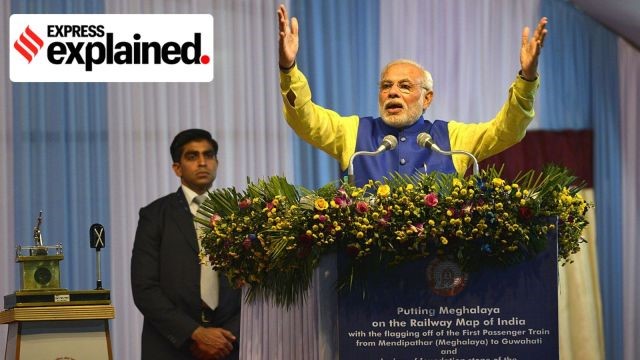
- 24 Mar 2025
In News:
The Inner Line Permit (ILP) system plays a significant role in regulating entry into certain states of India's Northeast. Originally derived from the Bengal Eastern Frontier Regulation (BEFR) of 1873, the ILP aims to protect indigenous communities and preserve their cultural identity by regulating the movement of non-residents into restricted areas. This system requires Indian citizens who are not permanent residents of these states to obtain an ILP to enter and stay in these areas for a limited period.
Currently, four states—Arunachal Pradesh, Nagaland, Mizoram, and Manipur—require an ILP for entry. In recent years, the ILP system has become a topic of contention in Meghalaya, where local opposition to developmental projects, particularly railway expansion, has intensified.
What is the Inner Line Permit (ILP)?
The ILP is an official travel document issued by the respective state governments and regulates the entry of Indian citizens into restricted tribal areas. The system's primary aim is to safeguard indigenous communities from exploitation and prevent land alienation.
- Legal Basis: The Bengal Eastern Frontier Regulation (BEFR), 1873, introduced by the British, created an "Inner Line" to restrict the movement of outsiders. The Foreigners (Protected Areas) Order, 1958 and Foreigners (Restricted Areas) Order, 1963 further delineated areas where foreigners and Indian citizens from other states require special permits to enter.
- Difference Between ILP and PAP: The Inner Line Permit (ILP) applies to Indian citizens in certain northeastern states, while the Protected Area Permit (PAP) is for foreigners wishing to enter restricted areas, including parts of Arunachal Pradesh, Sikkim, Himachal Pradesh, J&K, and Rajasthan.
Current Status of Rail Connectivity in Meghalaya
Meghalaya has limited rail connectivity, with Mendipathar in North Garo Hills being the only operational railway station since 2014. Passenger services run daily between Mendipathar and Guwahati, and the station recently received its first freight shipment. However, several proposed railway projects in the state face significant opposition from local groups, particularly in the Khasi and Jaintia Hills.
The Northeast Frontier Railways (NFR) had planned three key projects in Meghalaya:
- Tetelia-Byrnihat Railway Line (21.5 km connecting Assam to Meghalaya)
- Byrnihat-Shillong Railway Line (108.76 km)
- Chandranathpur-Jowai Railway Line (connecting Assam to Jowai)
These projects are now at risk of being shelved due to local resistance, particularly from Khasi pressure groups such as the Khasi Students' Union (KSU).
Opposition to Railway Projects in Meghalaya
The opposition to these railway projects stems from fears of an influx of “outsiders” into the state, potentially threatening the cultural identity and livelihood of indigenous communities. The Khasi Students' Union (KSU) has been opposed to the extension of railway lines into the Khasi Hills since the 1980s, arguing that such projects would facilitate large-scale migration and overwhelm local populations. The group's concerns have now expanded to include other regions, such as the Jaintia Hills, where protests have emerged against the proposed Chandranathpur-Jowai line.
The KSU has long advocated for the introduction of the ILP system in Meghalaya to prevent non-residents from settling in the state. They argue that the ILP would serve as a safeguard against uncontrolled migration, offering a mechanism to regulate entry, especially at railway stations, where people can be monitored and restricted from staying beyond their designated period.
The KSUemphasized that while the group does not oppose railway development in principle, it seeks safeguards like the ILP to ensure that the state's indigenous communities do not become minorities.
Economic Considerations and Government Response
While the local opposition is strong, there is also significant support for railway connectivity, particularly from economic perspectives. Chief Minister Conrad Sangma has argued that improved rail connectivity would reduce logistical costs and facilitate the movement of goods, benefiting both the state's economy and its local entrepreneurs. Toki Blah, a political commentator, noted that railway expansion could lower the cost of goods, particularly in a state where much of the population depends on small-scale agriculture and service-based industries.
Additionally, representatives from the Garo Hills, another major tribal region in Meghalaya, have advocated for expanding existing rail links from Mendipathar to Baghamara in the South Garo Hills, citing the need for better transportation infrastructure.
Shaheed Diwas
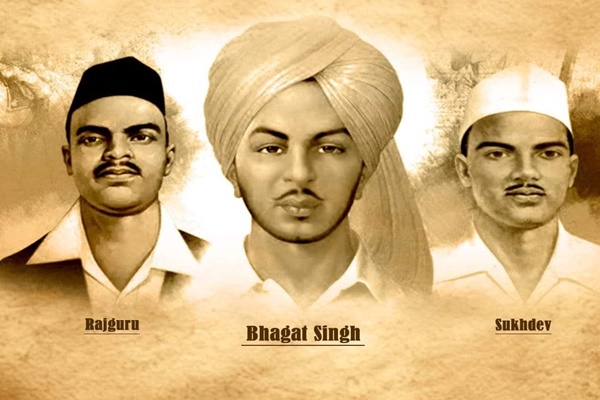
- 24 Mar 2025
In News:
On Shaheed Diwas (23rd March), the nation commemorates the supreme sacrifice of three iconic freedom fighters—Bhagat Singh, Shivaram Rajguru, and Sukhdev Thapar. Prime Minister Narendra Modi paid tribute to these martyrs, remembering their unwavering resolve and courageous efforts in the struggle for India's independence. This day marks the execution of these three revolutionaries by British colonial authorities in Lahore Jail in 1931.
Background of the Martyrs
The trio was convicted for their involvement in the 1928 Lahore Conspiracy Case, which revolved around the killing of J.P. Saunders, a British officer. The incident occurred after Saunders was mistakenly identified as Superintendent James Scott, who was blamed for the death of Lala Lajpat Rai during a protest against the Simon Commission. The execution of these freedom fighters on 23rd March 1931 became a symbol of their sacrifice for the cause of India’s freedom.
The three were members of the Hindustan Socialist Republican Association (HSRA), a revolutionary group that sought to overthrow British rule through armed struggle. Their fearless actions continue to inspire the nation to this day.
Brief Profiles of the Martyrs
- Bhagat Singh (1907–1931): Born in Punjab, Bhagat Singh was a prominent revolutionary who played a key role in the fight against British rule. He is remembered for his bold actions, such as the bombing of the Central Legislative Assembly in 1929, and his fearless stand against colonial oppression. His execution at the age of 23 became a catalyst for the freedom struggle.
- Shivaram Rajguru (1908–1931): Born in Maharashtra, Rajguru was a committed revolutionary who, along with Bhagat Singh, was involved in the assassination of J.P. Saunders. He was known for his dedication to the cause of armed resistance and his determination to fight colonial oppression. Rajguru was executed at the age of 23.
- Sukhdev Thapar (1907–1931): A key figure in mobilizing youth for the freedom struggle, Sukhdev was born in Punjab. He played a significant role in the activities of the HSRA and was instrumental in organizing protests and revolutionary activities. His execution, like that of his fellow revolutionaries, became a symbol of the ultimate sacrifice for India's freedom.
Financial Assistance for Promotion of Art and Culture
- 24 Mar 2025
In News:
The Ministry of Culture has implemented several schemes aimed at supporting the growth and preservation of India's rich art and cultural heritage. One of the key initiatives is the ‘Financial Assistance for Promotion of Art and Culture’ Scheme, a Central Sector Scheme that provides financial support to eligible cultural organizations across the country. Below is an overview of the scheme, its components, and eligibility criteria.
Eligibility Criteria for Organizations
To be eligible for assistance under this scheme, cultural organizations must meet the following criteria:
- Registered as a society, trust, or not-for-profit company for at least three years.
- Registered on the NGO Darpan Portal of NITI Aayog.
- Have a primary focus on cultural activities.
- Submit audited financial statements for the last three years.
- Have filed Income Tax returns during the last three years.
Sub-Components of the Scheme
The scheme consists of eight sub-components, each designed to support different aspects of art and culture across India.
- Financial Assistance to Cultural Organizations with National Presence
- Objective: To support large cultural organizations with a nationwide presence.
- Grant Amount: Up to Rs. 1 crore (may increase to Rs. 5 crore in exceptional cases).
- Cultural Function & Production Grant (CFPG)
- Objective: Provides financial aid for cultural events like seminars, conferences, research, workshops, festivals, exhibitions, and productions of dance, drama, and music.
- Grant Amount: Up to Rs. 5 lakh (may increase to Rs. 20 lakh in exceptional cases).
- Financial Assistance for the Preservation & Development of Cultural Heritage of the Himalayas
- Objective: To promote and preserve the cultural heritage of the Himalayan region, including Jammu & Kashmir, Himachal Pradesh, Uttarakhand, Sikkim, and Arunachal Pradesh.
- Grant Amount: Up to Rs. 10 lakh per year (may increase to Rs. 30 lakh in exceptional cases).
- Financial Assistance for the Preservation & Development of Buddhist/Tibetan Organizations
- Objective: To support Buddhist/Tibetan organizations, including monasteries, in preserving and developing Buddhist/Tibetan culture and traditions.
- Grant Amount: Up to Rs. 30 lakh per year (may increase to Rs. 1 crore in exceptional cases).
- Financial Assistance for Building Grants including Studio Theatres
- Objective: To provide financial support for creating cultural infrastructure, such as studio theatres, auditoriums, and rehearsal halls, along with providing essential facilities like lighting, acoustics, and sound systems.
- Grant Amount: Up to Rs. 50 lakh in metro cities and Rs. 25 lakh in non-metro cities.
- Financial Assistance for Allied Cultural Activities
- Objective: To assist in the creation of assets that enhance the audio-visual spectacle for live performances and cultural activities.
- Grant Amount:
- Audio: Up to Rs. 1 crore.
- Audio + Video: Up to Rs. 1.5 crore (includes 5 years of operation and maintenance costs).
- Intangible Cultural Heritage
- Objective: To safeguard and promote India’s intangible cultural heritage, supporting institutions, groups, and NGOs involved in relevant activities.
- Grant Amount: Varies based on specific activities.
- Domestic Festivals and Fairs
- Objective: To assist in organizing RashtriyaSanskritiMahotsavs (National Culture Festivals) across India, engaging artists and showcasing various cultural traditions.
- Grant Amount: Event-based assistance; Rs. 38.67 crore was released in the last three years for these events.
Implementation and Monitoring
The Ministry of Culture closely monitors the effective utilization of funds under this scheme through:
- Utilization Certificates and audited financial statements.
- On-site physical inspections to assess the progress and impact of the funded projects.
- Regular oversight ensures that the assistance is used for its intended purpose and meets the objectives of cultural promotion and preservation.
Support for Individual Artists and Cultural Research
In addition to the above schemes, the Ministry of Culture also supports individual artists and cultural researchers through the ‘Scheme of Scholarship and Fellowship for Promotion of Art and Culture’. This scheme includes the following components:
- Award of Scholarships to Young Artists (SYA)
- Objective: To support young artists aged 18-25 years in various cultural fields.
- Duration: 2 years.
- Eligibility: Applicants should have undergone at least 5 years of training under a recognized guru or institution.
- Award of Senior/Junior Fellowships
- Senior Fellowship: For individuals 40 years and above to support cultural research.
- Junior Fellowship: For individuals 25-40 years for cultural research.
- Up to 400 Fellowships are awarded annually.
- Tagore National Fellowship for Cultural Research
- Objective: To provide funding for cultural research under two categories: Tagore National Fellowship and Tagore Research Scholarship.
- Selection: Fellows and scholars are selected by the National Selection Committee.
- Project Grants for Research in Performing Arts
- Objective: To provide financial assistance to individuals conducting research in performing arts.
Eurasian Goshawk sighting at Tansa Wildlife Sanctuary
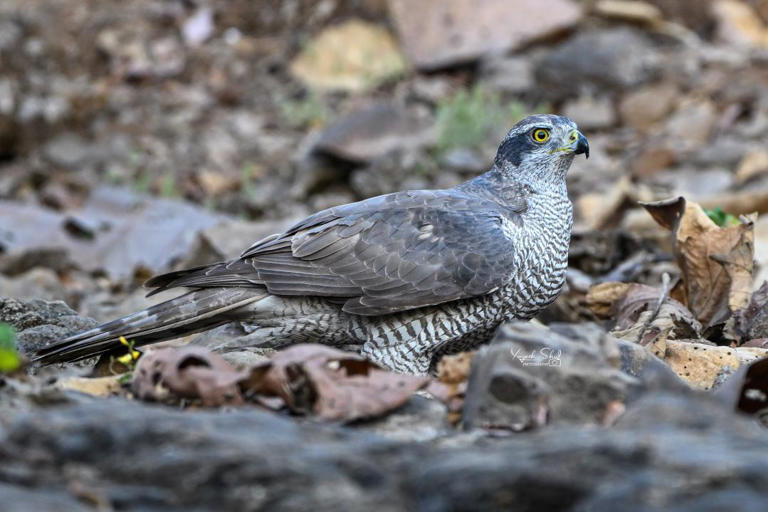
- 24 Mar 2025
In News:
A significant wildlife discovery has been made at Tansa Wildlife Sanctuary, Maharashtra, where the Eurasian goshawk, a large bird of prey, was spotted for the first time. This marks the first documented instance of the Eurasian goshawk in the sanctuary, although the species has been previously recorded in Maharashtra three times.
About the Eurasian Goshawk
- Scientific Name: Accipiter gentilis
- Description: A powerful raptor known for its short, broad wings and long tail.
- Habitat: Dense forests, particularly coniferous and mixed woodlands across Europe, Asia, and parts of North America.
- Winter Visitor: The Eurasian goshawk is a winter visitor to India, making this sighting at Tansa particularly noteworthy.
Tansa Wildlife Sanctuary
- Located in the foothills of the Western Ghats in Thane District, Maharashtra, Tansa Wildlife Sanctuary covers 320 sq. km.
- Positioned approximately 90 km northeast of Mumbai, it serves as a vital catchment area for Tansa Lake and is bordered by the Tansa and Vaitarna rivers.
Flora and Fauna
The sanctuary boasts a rich diversity of flora and fauna, including:
- 200 bird species
- 54 animal species, including endangered animals like:
- Panther
- Hyena
- Barking Deer
- Notable species include:
- Critically Endangered vultures
- Vulnerable Pallas’s fish-eagle
Vegetation and Landscape
- Southern Tropical Moist Deciduous Forest with patches of Evergreen Forest.
- Flora includes trees like Kalamb, Bibla, Khair, Hed, Teak, and Bamboo.
Avian Discoveries
Tansa Wildlife Sanctuary is also renowned for its avian discoveries, such as the critically endangered Forest Owlet, which was first documented here in 2014. This discovery highlighted the sanctuary’s significance for bird conservation.
Conservation Efforts and Ecological Role
The sighting of the Eurasian goshawk further emphasizes the critical need for ongoing conservation efforts at Tansa Wildlife Sanctuary.
Role of the Eurasian Goshawk in Ecosystem
As a bird of prey, the Eurasian goshawk plays a vital role in maintaining ecological balance by controlling populations of smaller mammals and birds.
Though listed as "Least Concern" on the IUCN Red List, the Eurasian goshawk’s presence underscores the sanctuary’s importance in the region’s biodiversity.
India-ASEAN and EU Cooperation on Counter-Terrorism
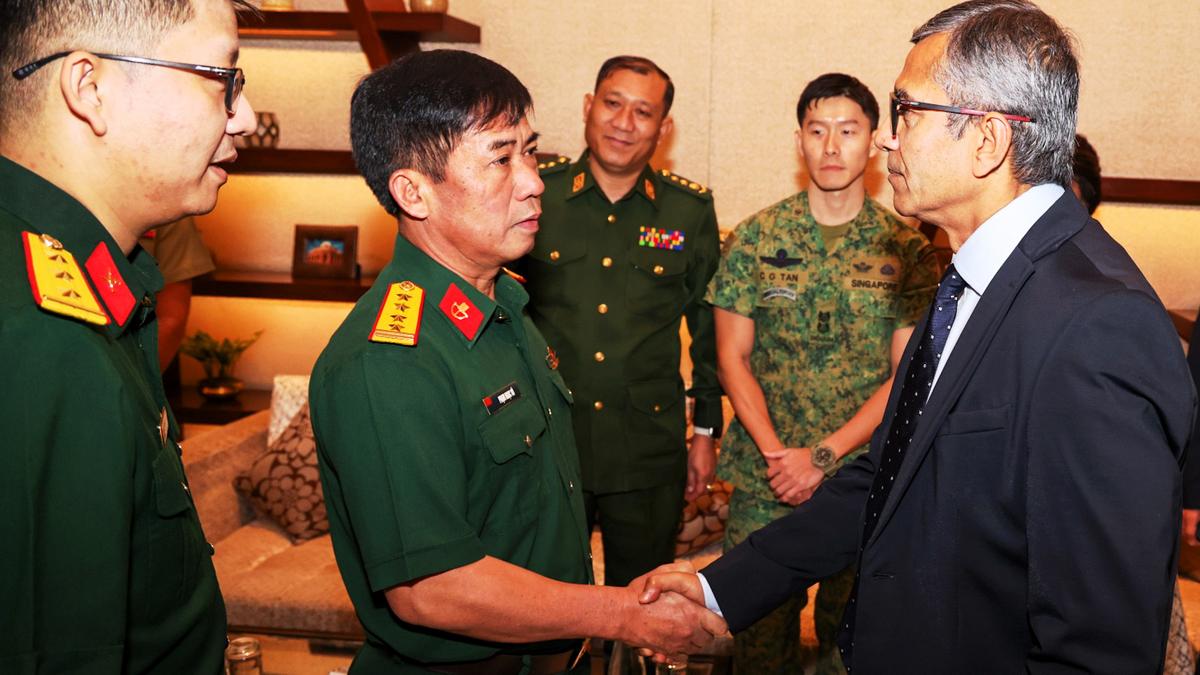
- 23 Mar 2025
In News:
- 14th ASEAN Defence Ministers’ Meeting-Plus (ADMM-Plus) Experts’ Working Group on Counter-Terrorism (EWG on CT) was held in New Delhi.
- India and Malaysia took over as co-chairs for the 2024–2027 cycle, succeeding Myanmar and Russia (2021–2024).
- Two major exercises were announced:
- Table-top Exercise in Malaysia – 2026
- Field Training Exercise in India – 2027
- These are part of the EWG on CT 2024–2027 Work Plan.
Purpose and Agenda:
- To devise a comprehensive and coordinated counter-terrorism strategy.
- To share on-ground experiences of ASEAN and partner nations’ defence forces.
- Focus on evolving threats like violent extremism, radicalisation, and terrorism financing.
Participants in ADMM-Plus EWG on CT:
- ASEAN Member States: Indonesia, Malaysia, Philippines, Singapore, Thailand, Brunei, Vietnam, Laos, Myanmar, Cambodia.
- Dialogue Partners: India, China, U.S., Russia, Japan, South Korea, Australia.
- ASEAN Secretariat also participated.
India-EU Counterterrorism Engagement:
- On the sidelines of the Raisina Dialogue, the European Union (EU) conducted a technical workshop in New Delhi on preventing and countering violent extremism.
- Organized with the Embassy of the Netherlands and attended by security experts from EU states like Belgium, Bulgaria, Germany, and the Netherlands, as well as the Strong Cities Network (SCN).
- Discussions focused on:
- De-radicalisation strategies
- Rehabilitation of extremists
- Whole-of-government approaches
- Risk evaluation and reintegration
- Reinforced the India-EU commitment made during the EU College of Commissioners' visit to India and in the Joint Leaders' Statement.
About ASEAN:
- Established: August 8, 1967 (Bangkok Declaration)
- Headquarters: Jakarta, Indonesia
- Motto: "One Vision, One Identity, One Community"
- Members (10):
- Founding (1967): Indonesia, Malaysia, Philippines, Singapore, Thailand
- Later: Brunei (1984), Vietnam (1995), Laos & Myanmar (1997), Cambodia (1999)
- Population: ~662 million (2022)
- Combined GDP: $3.2 trillion (2022)
ASEAN Institutional Mechanisms:
- ASEAN Summit – Annual heads-of-state meeting.
- ASEAN Coordinating Council (ACC) – Implements decisions and agreements.
- ASEAN Regional Forum (ARF) – India joined in 1996; focuses on regional security dialogue.
- ASEAN Secretariat – Administrative support to ASEAN initiatives.
India-ASEAN Relations:
- Sectoral Dialogue Partner since 1992; Full Dialogue Partner since 1996.
- India-ASEAN FTA:
- Goods (2009)
- Services & Investments (2014)
- Strategic Partnership: Established in 2012.
- India in ADMM-Plus: Actively participates in defence and security cooperation mechanisms.
- ASEAN Future Forum: Proposed by Vietnam (2023); India is a founding member.
2030 Global Forest Vision (GFV)
- 23 Mar 2025
In News:
The 2030 Global Forest Vision (GFV), released in March 2025 by the Forest Declaration Assessment (FDA), outlines priority actions for governments to reverse forest loss and align environmental and trade policies ahead of UNFCCC COP30 (November 2025).
Background:
- The Forest Declaration Assessment (FDA) was established in 2015 to monitor progress on the New York Declaration on Forests (NYDF), a voluntary pact launched in 2014.
- NYDF includes 10 goals aimed at halting deforestation by 2030 and is supported by governments, corporations, indigenous groups, and civil society.
- India is not a signatory to the NYDF as of 2025.
Current State of Forests (Key Data):
- Despite commitments from 140 countries, 6.37 million hectares of forests were lost in 2023.
- Major drivers of deforestation:
- Agricultural demand for palm oil, soy, beef, and timber.
- 80% of Amazon deforestation is due to cattle ranching.
- 800+ million trees lost between 2017–2022 to meet Brazilian beef exports.
- In Indonesia and Malaysia, palm oil expansion threatens orangutans and Sumatran tigers.
Eight Priority Actions for Governments (GFV 2025):
- Ambition:Integrate forest conservation into national climate and biodiversity plans and COP30 commitments.
- Trade:Ensure legal, deforestation-free, and degradation-free trade through international partnerships.
- Finance:Scale up results-based payments and forest carbon credit systems, as agreed in the 2024 Forest & Climate Leaders’ Statement.
- Rights:Secure land rights of Indigenous Peoples (IPs) and Local Communities (LCs) to protect traditional forest stewardship.
- Supervision:Mandate financial institutions to assess and manage forest-related risks.
- Subsidies:Repurpose harmful subsidies to support sustainable food systems, bioeconomy, and forest management.
- Governance:Align land-use sector governance with global forest and climate commitments.
- Debt Flexibility:Recognize forests as natural capital in debt management to enhance fiscal space for forest-rich countries.
Global and Regional Efforts:
- EU Deforestation Regulation (2026):Bans imports linked to deforestation; companies must ensure supply chain transparency.
- U.S. Initiatives:Stricter laws against illegal logging and deforestation-linked imports.
- Challenges:
- China and India have not implemented deforestation-free trade regulations.
- Smallholder farmers lack the resources to certify products as deforestation-free.
- Developing nations (Brazil, Indonesia, African countries) express concerns over economic impacts of stricter trade rules.
Recommendations by GFV 2025:
- Tighten Global Trade Policies:Prevent companies from rerouting products to markets with weak regulations.
- Adopt Deforestation-Free Trade Laws:India, China, and other major economies urged to enact such policies.
- Support Local Economies:Provide technical and financial support to farmers for sustainable practices.
- Enhance Global Monitoring:Improve tracking systems for forest-linked commodities and promote global cooperation.
Kerala Establish Senior Citizens Commission
- 23 Mar 2025
In News:
In a landmark move, Kerala has become the first state in India to pass legislation creating a Senior Citizens Commission, with the passing of the Kerala State Senior Citizens Commission Bill, 2025.
Background: Rising Elderly Population in Kerala
- Kerala is witnessing rapid population ageing, outpacing national trends.
- Elderly (60+) as % of total population:
- 1961: 5.1% (Kerala) vs. 5.6% (India)
- 2001: 10.5% (Kerala) vs. 7.5% (India)
- 2015: 13.1% (Kerala) vs. 8.3% (India)
- Current elderly population: Approximately 4.8 million, expected to rise to 8.4 million by 2036.
- Key issues: neglect, abuse, financial insecurity, and loneliness.
Senior Citizens Commission: Key Highlights
- Statutory body under the Kerala State Senior Citizens Commission Act, 2025.
- Objective: Protection, welfare, rehabilitation, and empowerment of senior citizens.
- Will act as an independent authority with powers similar to a civil court.
Structure:
- Chairperson (status of Govt. Secretary) and three members (all senior citizens).
- Composition includes at least one woman and one member from SC/ST communities.
- Term: 3 years.
- Experts may be invited as special invitees (no voting rights).
Core Functions and Responsibilities:
- Policy Advisory:
- Recommends policies for elderly welfare.
- Aligns with national goals, such as the Maintenance and Welfare of Parents and Senior Citizens Act, 2007.
- Legal and Grievance Redressal:
- Investigates complaints of abuse, neglect, or exploitation.
- Can summon individuals, record evidence, and recommend protective actions.
- Healthcare and Mental Well-being:
- Promotes geriatric care, regular health check-ups, and mental health support.
- Addresses loneliness, depression, and social isolation.
- Social Inclusion and Engagement:
- Encourages intergenerational bonding and community programs.
- Utilizes skills and experience of the elderly for social and community development.
- Financial Security Support:Aids in accessing pensions, social security schemes, and financial counselling.
- Monitoring and Reporting:
- Submits periodic reports to the state government.
- Makes recommendations for policy improvement and conflict resolution.
- Custodial Oversight:Addresses issues related to elderly detainees in prisons and lock-ups.
Budget and Administrative Details:
- Annual expenditure: Approx. ?1 crore (salaries, allowances, operations).
- One-time setup cost: ?9 lakh from the Consolidated Fund of the State of Kerala.
Significance:
- First such commission in India, fulfilling recommendations under the National Policy on Senior Citizens, 2011.
- Aims to serve as a model for other Indian states facing similar demographic shifts.
- Reinforces Kerala’s leadership in elderly welfare policies.
GPS Interference and Spoofing in Indian Airspace

- 23 Mar 2025
In News:
Between November 2023 and February 2025, 465 incidents of GPS interference and spoofing were reported, predominantly in the Amritsar and Jammu border regions. This was disclosed by Minister of State for Civil Aviation MurlidharMohol in a written reply to the Lok Sabha.
What is GPS/GNSS Spoofing?
- GPS (Global Positioning System) and GNSS (Global Navigation Satellite System) spoofing involves broadcasting false GPS signals that deceive receivers into calculating incorrect locations.
- It is a form of cyberattack exploiting weak satellite signal strength to override legitimate GPS data.
- It can mislead aircraft navigation systems, creating flight safety risks in sensitive regions like international borders.
How GPS Spoofing Works:
- GPS satellites transmit weak signals to Earth.
- Spoofers broadcast stronger fake signals mimicking these satellites.
- Receivers (like those in aircraft) pick up false data, resulting in mislocation or navigation errors.
Types of Spoofing Attacks:
- GPS Spoofing – False location data.
- IP Spoofing – Hides origin of data, often used in DDoS attacks.
- SMS/Caller ID Spoofing – Disguises identity to deceive users.
Government Response:
DGCA Circular (Nov 2023):
- Mandated reporting of GPS interference.
- Issued mitigation guidelines for:
- Aircraft operators
- Pilots
- Air Traffic Controllers
- Air Navigation Service Providers (ANSP)
Use of International Best Practices:
- Guidelines align with ICAO and EASA standards.
- NOTAMs (Notice to Airmen) are issued in affected areas.
- Airlines implement Standard Operating Procedures (SOPs) to manage spoofing incidents.
Navigation Redundancy Measures:
- Retention of ground-based navigation systems as backups.
- Ensures continued navigation in the event of GPS disruption.
Role of AAI (Airports Authority of India):
- Sole Air Navigation Service Provider (ANSP) in India.
- Continuously upgrading air navigation infrastructure to counter emerging threats like spoofing.
World Happiness Report 2025
- 23 Mar 2025
In News:
The World Happiness Report (WHR) 2025 was released on 20th March (World Happiness Day) by the Wellbeing Research Centre at the University of Oxford, in collaboration with Gallup and the UN Sustainable Development Solutions Network (UNSDSN).
India’s Performance:
- India’s Rank (2025):118th out of 147 countries (Improved from 126th in 2024).
- Sub-Indicator Performance:
- Donations: 57th
- Volunteering: 10th
- Helping a Stranger: 74th
- Wallet Return Probability:
- 115th (by neighbor)
- 86th (by stranger)
- 93rd (by police)
- Sub-Indicator Performance:
- Happiness Score: Increased from 4.054 (2021–23) to 4.389 (2022–24).
- Rank among Neighbors:
- Nepal: 92nd
- Pakistan: 109th
- Myanmar: 126th
- Sri Lanka: 133rd
- Bangladesh: 134th
Top 10 Happiest Countries (2025):
- Finland (8th consecutive year)
- Denmark
- Iceland
- Sweden
- Israel
- Costa Rica (new entrant)
- Netherlands
- Norway
- Luxembourg
- Mexico(new entrant)
Least Happy Countries (Bottom 5):
- 147th: Afghanistan (4th consecutive year as lowest)
- 146th: Sierra Leone
- 145th: Lebanon
- 144th: Malawi
- 143rd: Zimbabwe
About the Report:
- Purpose: Measures global well-being through life evaluations and promotes policy focus on happiness, mental health, and quality of life over mere economic growth.
- Methodology:
- Based on Gallup World Poll (2022–2024 data).
- Uses Cantril Ladder Scale (0–10) for life evaluation.
- Six Key Indicators:
- GDP per capita
- Healthy life expectancy
- Social support
- Freedom to make life choices
- Generosity
- Perception of corruption
Global Trends in Happiness (2025):
- Nordic Dominance: Finland, Denmark, Iceland, and Sweden occupy top ranks.
- Decline in Western Countries:
- USA: 24th (down from 11th in 2012)
- UK: 23rd (lowest since 2017)
- Rising loneliness and social isolation major causes.
- Israel (5th): Maintained high rank despite ongoing conflict.
- Social Support Decline: 19% of young adults globally report having no one to rely on.
Special Focus: India vs Pakistan – The Paradox
Despite India’s:
- Higher GDP per capita ($2,480.8 vs Pakistan’s $1,365.3),
- Better health indicators (life expectancy: 58.1 vs 56.9),
- Better corruption perception rank (India: 96th, Pakistan: 135th),
India still ranks lower in happiness.
Reason: Low scores in perceived freedom and individual life satisfaction.
World Happiness Day:
- Observed on: 20th March
- Initiated by: Bhutan, which pioneered the concept of Gross National Happiness (GNH).
- Adopted by UNGA: July 2012
- Theme 2025:"Caring and Sharing"
Exercise Sea Dragon 2025

- 22 Mar 2025
In News:
India successfully concluded its participation in Exercise Sea Dragon 2025, a two-week multinational anti-submarine warfare (ASW) drill conducted in the Indo-Pacific region, hosted by the United States Navy’s 7th Fleet.
About Exercise Sea Dragon 2025
- Type: Annual Multinational Anti-Submarine Warfare (ASW) Exercise
- Duration: Two weeks
- Location:Andersen Air Force Base, Guam, Western Pacific
- Host: U.S. Navy’s 7th Fleet
- Inception: Started as a bilateral US-Australia exercise in 2019; expanded to include more Indo-Pacific allies.
- India’s Participation: Since 2021; SD25 marks India’s 4th consecutive participation.
Objectives of Sea Dragon 2025
- Enhance Maritime Security and regional naval cooperation
- Strengthen anti-submarine warfare capabilities
- Improve interoperability and coordination among Indo-Pacific allies
- Promote a free, open, and rules-based Indo-Pacific
- Address undersea threats, particularly in light of China’s growing maritime presence
Key Features of Sea Dragon 2025
- Live ASWEX: Tracking of real U.S. Navy submarines
- Mobile Drills: Use of MK-30 ‘SLED’ (Submarine Launch Expendable Device) as training targets
- Competitive Phase: Crews evaluated and graded based on ASW tactics and effectiveness
- Theoretical + Practical Training: Included tactical discussions, submarine detection, and neutralization scenarios
- Deployment of Advanced MPRA (Maritime Patrol and Reconnaissance Aircraft): Equipped with sonobuoys and sensors for submarine tracking
Significance for India
- Improves ASW Readiness and operational capabilities of the Indian Navy
- Strengthens ties with Quad members (U.S., Australia, Japan) and other Indo-Pacific partners
- Supports India’s broader strategy of naval modernization
- Aligns with India’s efforts to safeguard its interests in the Indian Ocean Region (IOR) and maintain regional stability.
Outcome
- RAAF (Australia) emerged as the top-performing team in the competitive phase.
- India successfully demonstrated its capabilities and reaffirmed commitment to Indo-Pacific security cooperation.
AFSPA in the Northeast
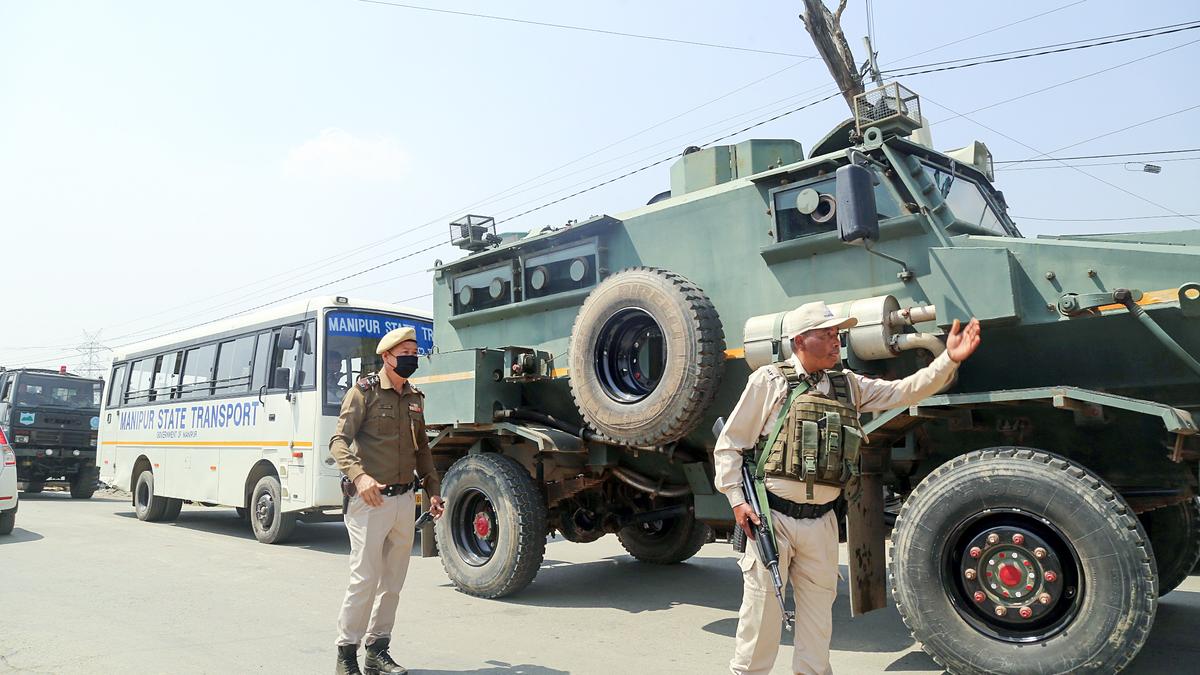
- 22 Mar 2025
In News:
The Union Ministry of Home Affairs (MHA) is reviewing the scope of the Armed Forces (Special Powers) Act, 1958 (AFSPA) in the Northeast, especially in light of ongoing ethnic violence in Manipur and security reviews in Nagaland, Arunachal Pradesh, and Assam.
What is AFSPA?
- AFSPA (1958) empowers the armed forces to maintain public order in ‘disturbed areas’.
- It authorizes armed forces to:
- Use force or open fire after due warning.
- Arrest without a warrant.
- Conduct searches without a warrant.
- Enjoy legal immunity from prosecution without prior sanction of the Central Government.
Declaration of Disturbed Area
- A region is declared ‘disturbed’ through a notification in the Official Gazette.
- The declaration can be made by:
- Governor of a State, or
- Central Government.
- Duration: Notifications are valid for 6 months, reviewed periodically for extension or withdrawal.
AFSPA in Manipur: Recent Developments
- AFSPA was withdrawn from all valley police stations between April 2022–April 2023 due to improved law and order.
- However, after ethnic violence erupted on May 3, 2023, the Act was reimposed in 6 police stations across 5 districts (mostly in valley areas) as of November 14, 2024.
- At a review meeting on March 20, 2025, the Indian Army proposed re-imposition of AFSPA in 12 more police station limits in Manipur Valley for operational efficiency.
- President’s Rule has been in force in Manipur since February 13, 2025.
- The final decision on AFSPA expansion in Manipur will be taken by the MHA.
Status in Other Northeastern States
- The MHA held a multi-agency review on March 19, 2025, regarding AFSPA coverage in Nagaland, Arunachal Pradesh, Assam, and Manipur.
- Current Authority to Notify Disturbed Areas:
- MHA: Nagaland and Arunachal Pradesh.
- State Governments: Manipur and Assam.
- Possible De-Notification: One district in Assam may be removed from AFSPA coverage based on the latest review.
Legal and Administrative Background
- AFSPA came into force in Manipur in 1981.
- Manipur attained Statehood in 1972, earlier being a Union Territory.
- The Imphal Municipality area has remained outside AFSPA since 2004.
- The most recent “disturbed area” notification for hill districts in Manipur was issued on September 26, 2024.
States Under AFSPA (as of February 2025)
- Manipur
- Nagaland
- Arunachal Pradesh
- Assam
- Jammu and Kashmir
PEPSU Muzhara Movement
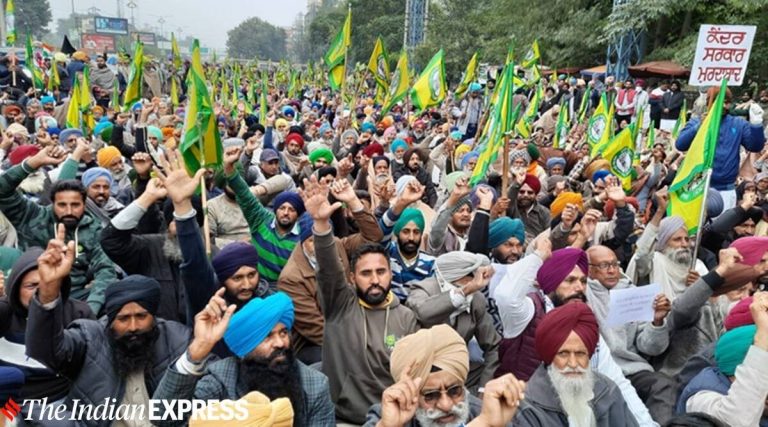
- 22 Mar 2025
In News:
The PEPSU Muzhara Movement, commemorated annually on March 19, was a significant agrarian uprising by landless tenant farmers (muzharas) in Punjab demanding ownership rights over the land they cultivated. It stands as a historic resistance against feudal and colonial exploitation.
Background & Region
- Initiation: Started in the 1930s in the Patiala princely state.
- Expanded Across: 784 villages in present-day Patiala, Barnala, Mansa, Sangrur, Bathinda, Mohali, Fatehgarh Sahib, Faridkot (Punjab), and Jind (now in Haryana).
- After independence, the region was reorganized into the Patiala and East Punjab States Union (PEPSU), where the movement intensified.
Who Were the Muzharas?
- Muzharas were landless tenant farmers who cultivated land owned by biswedars (feudal landlords).
- They were forced to give one-third of their produce to landlords, who further paid a share to princely rulers, who in turn paid the British.
- Even after Independence (1947), landlords continued this exploitative practice, leading to widespread unrest.
Causes of the Movement
- Feudal oppression and loss of ancestral land.
- Colonial revenue structure perpetuated peasant poverty.
- Post-independence continuation of feudal demands.
- Denial of land ownership despite generations of cultivation.
Key Leaders
- Jagir Singh Joga – Organised and united tenant farmers.
- Buta Singh – Advocate for land redistribution.
- Teja Singh Sutantar – Linked the struggle with broader peasant movements.
- Sewa Singh Thikriwala – Anti-feudal ideologue and early inspiration.
- Bhai Jodh Singh – Strengthened the movement through grassroots mobilisation.
Phases and Nature of the Movement
- Peaceful Protests: Initial petitions and mobilisations.
- Armed Resistance: Tenant farmers took up arms for self-defense as repression increased.
- Mass Mobilisation: Conferences, rallies, and united action across villages.
Significance of March 19
- In March 1949, landlords attempted to reclaim cultivated lands in Kishangarh (Mansa district).
- The muzharas resisted by harvesting crops themselves, leading to a violent standoff.
- On March 17, a police officer was killed, resulting in the arrest of 35 muzharas—all acquitted by 1950.
- On March 19, 1949, the army surrounded the village, and four muzharas were killed.
- Since 1953, March 19 has been observed as “Muzhara Shaheedi Diwas”, honouring martyrs of the movement.
Outcome
- Land Reforms (1952): The movement culminated in reforms granting ownership rights to tenant farmers.
- Became a symbol of peasant resistance against exploitation and injustice.
Samarth Incubation Programme
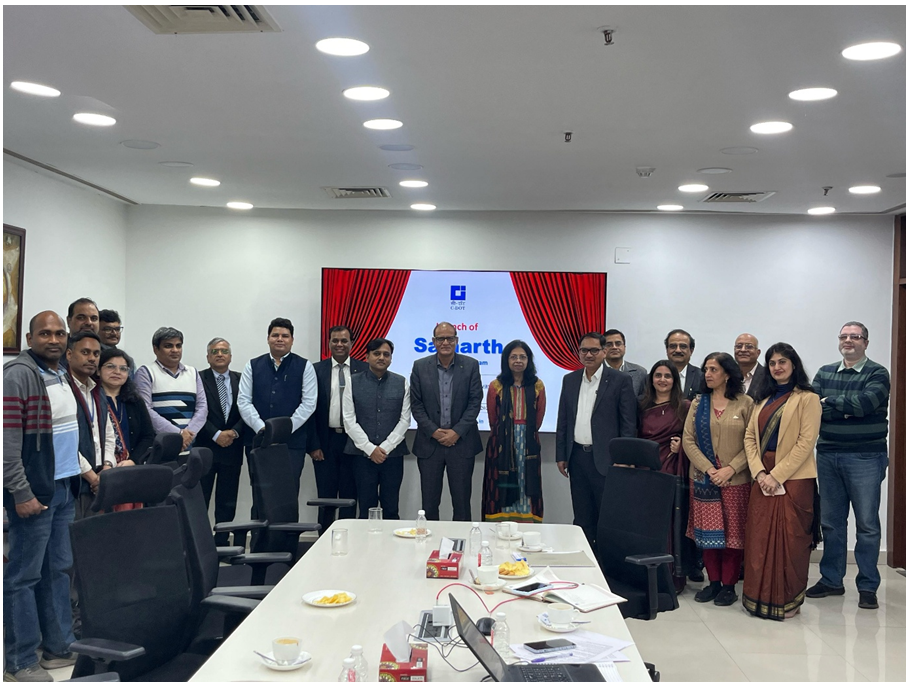
- 22 Mar 2025
In News:
The ‘Samarth’ Incubation Programme is a strategic initiative launched by the Centre for Development of Telematics (C-DOT) to foster startup-driven innovation in India’s rapidly evolving telecommunications and IT sectors. This programme aligns with the goals of Atmanirbhar Bharat and Digital India, aiming to build indigenous capabilities in cutting-edge technologies.
Key Highlights:
- Launched By:Centre for Development of Telematics (C-DOT), an autonomous R&D centre under the Department of Telecommunications (DoT), Government of India.
- Implementation Partner:Software Technology Parks of India (STPI), under the Ministry of Electronics and Information Technology (MeitY), which promotes IT/ITES innovation, startups, and R&D.
- Launch Date:19th March 2025.
- Objective:To support DPIIT-recognized startups developing next-generation technologies in the fields of:
- Telecom Software
- Cybersecurity
- 5G/6G Communications
- Artificial Intelligence (AI)
- Internet of Things (IoT)
- Quantum Technologies
- Program Structure:
- Two cohorts, each of six months duration.
- 18 startups per cohort (Total of 36 startups).
- Hybrid mode of delivery (virtual + physical support).
Support and Benefits Provided
- Financial Assistance:Grant of up to ?5 lakh per selected startup.
- Infrastructure Access:
- Fully furnished office space for 6 months at the C-DOT campus.
- Access to C-DOT’s lab and testing facilities.
- Mentorship & Networking:
- Guidance from C-DOT technical experts and industry leaders.
- Connection with investors, stakeholders, and potential collaborators.
- Future Opportunities:Eligible startups may be offered continued collaboration under the C-DOT Collaborative Research Program, based on their performance and innovation outcomes.
Selection Process
- Eligibility:Open to startups recognized by the Department for Promotion of Industry and Internal Trade (DPIIT).
- Screening:Applications are evaluated through a structured selection process:
- Screening of applications based on innovation potential.
- Pitch presentation before an expert selection committee.
- Final cohort selection.
Significance for India’s Tech Ecosystem
- Promotes self-reliance in telecom and IT hardware/software innovation.
- Encourages the commercialization of research and ideas in emerging technology domains.
- Creates a supportive ecosystem for startups to thrive through structured mentorship and funding.
- Contributes to job creation and skill development in advanced digital sectors.
APAAR ID

- 22 Mar 2025
In News:
The Centre and several State governments are pushing for large-scale adoption of the APAAR ID, leading to concerns over privacy, data security, and its voluntary status.
What is APAAR?
APAAR stands for Automated Permanent Academic Account Registry, a 12-digit unique student identification number. It is a central digital record system introduced under the National Education Policy (NEP) 2020 and is part of the broader ‘One Nation, One Student ID’ initiative. The ID consolidates students’ academic and co-curricular achievements across school and higher education, accessible via DigiLocker and generated through the UDISE+ portal.
Objectives and Benefits:
- Seamless Academic Mobility: Enables smooth transfers between schools and institutions.
- Permanent Record Keeping: Stores marksheets, qualifications, and affiliations in one place.
- Career and Skill Support: Facilitates use in entrance exams, job applications, skill training, and admissions.
- Data for Policymaking: Helps track educational outcomes and inform targeted interventions.
- Integration with Other Platforms:
- DigiLocker: Cloud-based certificate storage recognized under IT Rules, 2016.
- Academic Bank of Credits (ABC): Links credit transfers with APAAR ID.
Is APAAR Mandatory?
- Legally Voluntary: The Union Government clarified in Parliament (Dec 2024) that APAAR registration is not compulsory.
- Implementation Pressure: CBSE and states like Uttar Pradesh have aggressively pushed for 100% coverage, leading to confusion.
- Opt-Out Provision: Parents can submit a written refusal to schools. Templates are available from digital rights organizations like the Software Freedom Law Centre (SFLC).
Generation Process:
- School verifies student’s demographic details.
- Parent/guardian provides consent (especially for minors).
- ID is generated post-authentication.
Key Challenges:
- Privacy Concerns: Collection of children's personal data without a dedicated legal framework raises constitutional questions.
- Section 9(3) of the Digital Personal Data Protection Act, 2023 prohibits tracking and profiling of children.
- Risk of data exposure due to open APIs and lack of cybersecurity safeguards.
- Lack of Transparency: No clear policy document; RTI applications have been redirected multiple times without clear answers.
- Administrative Burden: Teachers duplicate data already recorded under UDISE+, leading to extra workload.
- Technical Glitches: Issues in Aadhaar linking and data mismatches delay generation. Example: Only 24% APAAR generation in Bengaluru Urban South due to such errors.
Way Forward:
- Clear Communication: Government must ensure schools inform parents about the voluntary nature.
- Legal Safeguards: A robust data protection mechanism should be mandated before full-scale rollout.
- Capacity Building: Train school authorities on secure data handling and informed consent procedures.
- Monitoring and Accountability: States should report progress and resolve grievances via helplines and grievance redress mechanisms.
WEF UpLink Annual Impact Report 2025

- 21 Mar 2025
In News:
The World Economic Forum’s (WEF) UpLink Annual Impact Report 2025 underscores the significant contributions of early-stage start-ups in tackling climate and sustainability challenges globally.
About UpLink:
- Launched: 2020 at Davos by WEF in collaboration with Deloitte and Salesforce.
- Objective: Open innovation platform to support the UN Sustainable Development Goals (SDGs) by connecting entrepreneurs with experts, investors, and stakeholders.
Key Environmental and Social Impacts (2023–2024):
Category Impact
Carbon Emissions 142,400 tonnes of CO? prevented (equal to emissions
of ~30,000 cars)
Ecosystem Protection 140 million hectares of land and water safeguarded
Water Management 2.5 billion litres of hazardous wastewater treated
Waste Management 28 million tonnes of waste tracked
Water, Sanitation & Hygiene (WASH) 2.7 million people gained improved access
Job Creation 30,000+ new jobs generated
Livelihood Support ~500,000 smallholder farmers and fishers experienced
income growth
Waste Collector Empowerment 18,000 collectors integrated into formal markets
Notable Indian Contributions:
- Indra Water: Processed 1.2 billion litres of wastewater in 2024 (243% rise from 2022).
- S4S Technologies: Reduced 60,000 tonnes of food waste — enough to feed 2.7 million people for a month.
Global Innovations Highlighted:
- EnviCore (Canada): Uses mining waste in construction to cut emissions.
- Umgrauemeio (Brazil): AI-based wildfire monitoring across 6.7 million hectares of forests.
- SHAYP: Saved 7 billion litres of water in 2024 using leakage detection; aims for 100 billion litres by 2027.
- GreenPlat (Brazil): Tracked 12.3 million tonnes more waste in 2024 than the previous year.
Investment and Innovation Trends:
- Total Funds Raised by UpLink Ventures in 2024: $633 million (up by $196 million from 2023).
- Customer Base Growth: Nearly 50% of ventures reported over 40% increase in customers.
- Circular Economy Focus: 13 ventures supported under the Traceability for Circularity Challenge to promote ethical and waste-reducing value chains.
Future Focus Areas (Planned by UpLink):
- Sustainable mining
- Carbon capture technologies
- AI-driven environmental monitoring
State of the Global Climate 2024 Report
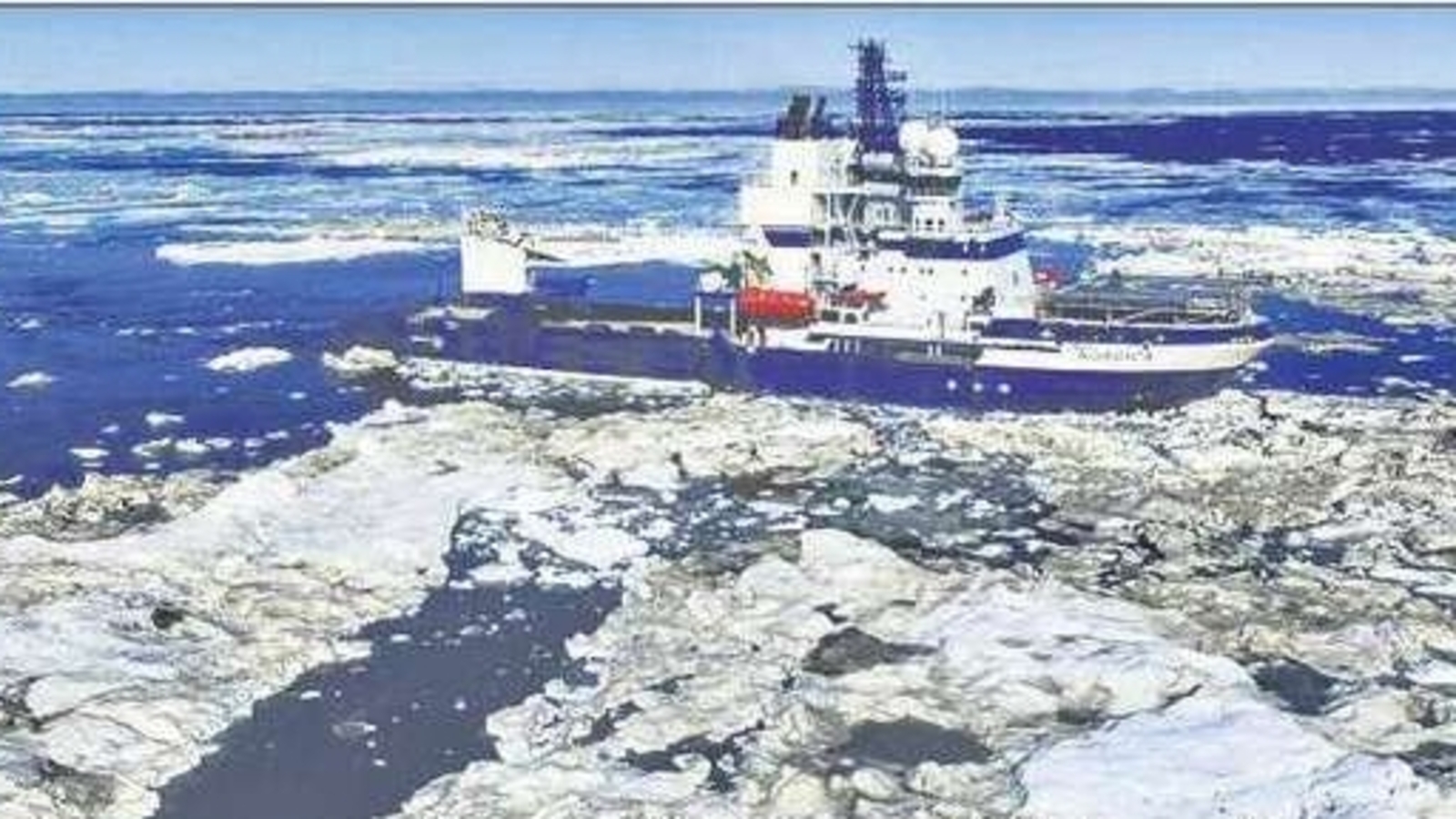
- 21 Mar 2025
In News:
The World Meteorological Organization (WMO) released its State of the Global Climate 2024 Report at COP29 (Baku), warning that global warming is dangerously close to breaching the 1.5°C threshold set by the Paris Agreement.
About WMO
- Type: UN Specialized Agency
- Established: 1950
- Headquarters: Geneva, Switzerland
- Membership: 193 (187 Member States + 6 Territories)
- Mandate: Meteorology, operational hydrology, and geophysical sciences.
- Reports Released:
- State of the Global Climate Report
- Greenhouse Gas Bulletin
- Global Water Resources Report
- State of Climate Services Report
- United in Science Report
Key Findings – State of Global Climate 2024
Global Temperature Rise
- Current warming: 1.34°C–1.41°C above pre-industrial levels.
- 19 of the last 20 months crossed the 1.5°C threshold temporarily.
- 2024: Warmest year in the 175-year observational record.
- Projected crossing of the 1.5°C threshold: by September 2029.
Greenhouse Gases (2023)
- CO?: 420 ppm – 151% of pre-industrial levels (highest in 800,000 years)
- CH? (Methane): 1923 ppb – 266% of pre-industrial levels
- N?O (Nitrous Oxide): 335.8 ppb – 124% of pre-industrial levels
Ocean & Cryosphere
- Ocean Heat Content: Highest in 65 years – oceans absorb 90% of global heat
- Sea Level Rise:
- 1993–2002: 2.1 mm/year
- 2015–2024: 4.7 mm/year (rate doubled)
- Glacier Melt:
- 2022–2024: Largest 3-year negative mass balance on record
- Severe loss in Norway, Sweden, Svalbard, and Andes
- Arctic Sea Ice: Record lows for 18 consecutive years
- Antarctic Sea Ice: 2nd-lowest extent ever
- Ocean Acidification:
- Surface pH falling fastest in Indian Ocean, Southern Ocean, and Pacific
- Effects irreversible for centuries
Extreme Weather Events & Displacement
- 2024: Record-high displacements from climate disasters
- Cyclones, floods, and droughts worsened food and humanitarian crises
- Worst-hit regions: East Asia, Southeast Europe, West Asia, Mediterranean
Reasons Behind These Trends
- GHG Emissions: Fossil fuel combustion, industrial emissions, agriculture, and deforestation.
- El Niño Effect: Warm Pacific currents intensified 2024’s global heat.
- Urban Heat Islands: Dense cities retain heat, increasing local warming.
- Ocean Absorption: Excess atmospheric CO? and heat absorbed by oceans.
Global Climate Governance
- UNFCCC (1992): Multilateral treaty for climate action.
- Paris Agreement (2015):
- Goal: Limit warming to below 2°C, aim for 1.5°C.
- Nationally Determined Contributions (NDCs)
- $100 billion/year climate finance pledge
- Global Methane Pledge (2021): Cut methane emissions by 30% by 2030.
- Global Ocean Treaty (2023): Protect 30% of oceans by 2030.
- UN Decade on Ecosystem Restoration (2021–2030): Forest and marine recovery.
- IPCC: UN scientific body for climate assessments (doesn’t conduct research).
India’s Climate Initiatives
Targets & Strategies
- Net Zero by 2070 (COP26)
- LT-LEDS (2022): Long-term low emissions strategy
- Updated NDC (2022):
- Reduce GDP emissions intensity by 45% by 2030 (vs. 2005)
- 50% electricity capacity from non-fossil sources by 2030
Renewable Energy & Alliances
- International Solar Alliance (ISA):
- Launched with France in 2015 (COP21)
- Aim: Mobilize $1 trillion in solar investments by 2030
Afforestation & Ecosystem Protection
- Green Credit Program (2023) – incentivizes afforestation
- Ek Ped MaaKe Naam (2024) – tree plantation campaign
- NAP, CAMPA, Forest Act 1980 – promote forest restoration
- MISHTI (2023) – Mangrove restoration (?12.55 cr in 2024–25)
Behavioral Change
- LiFE (Lifestyle for Environment) – promotes sustainable consumption
Challenges to Climate Action
Sector Key Challenges
Energy High coal dependence (>50%), renewable intermittency, grid gaps, foreign tech reliance
Urbanization Rising energy/waste demand, land use conflicts
Industry Hard-to-abate emissions in cement, steel, transport
Agriculture Fossil fuel inputs, livestock methane, fertilizer N?O
Finance Climate finance disparities; India criticized COP29’s $300 bn/year goal as insufficient
Equity Developed nations emit more, but developing nations suffer more
Greenwashing Misleading climate claims by corporates/governments
SansadBhashini Initiative
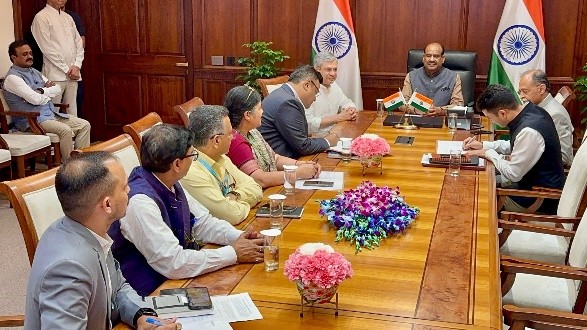
- 21 Mar 2025
In News:
The SansadBhashini Initiative is a collaborative project between the Lok Sabha Secretariat and the Ministry of Electronics and Information Technology (MeitY), launched to enhance digital and linguistic accessibility in India's parliamentary functioning.
About SansadBhashini
- Objective:To provide real-time AI-powered translation and transcription of parliamentary proceedings and documents across multiple Indian languages, ensuring greater transparency, inclusivity, and accessibility.
- Associated Platform:It is built on MeitY’sBhashini platform, a part of the National Language Translation Mission (NLTM), focused on democratizing access to digital content in Indian languages.
Key Features and Technologies Used
- AI-Powered Real-Time Translation: Enables instantaneous multilingual translation of legacy debates, legislative documents, and committee reports.
- Speech-to-Text Transcription System
- Converts spoken parliamentary debates into text with features such as:
- Background noise reduction
- Customizable vocabulary suited for legislative discourse
- High transcription accuracy
- Converts spoken parliamentary debates into text with features such as:
- Automatic Summarization: Generates concise and coherent summaries of long parliamentary discussions, aiding in faster decision-making and better public understanding.
- AI-Driven Chatbot Support
- Assists MPs, researchers, and officials with quick access to:
- Procedural rules
- Parliamentary archives
- Legislative documents
- Assists MPs, researchers, and officials with quick access to:
- Multilingual Accessibility and Inclusivity: Enhances linguistic diversity in governance by making proceedings available in multiple regional languages, thereby fostering greater public engagement.
Significance
- Strengthens e-Governance and digital democracy by making Parliament more accessible to citizens, especially non-Hindi/English speakers.
- Enhances documentation, transparency, and archiving through digitization and AI tools.
- Empowers MPs and legislative staff with real-time information and language tools, improving efficiency.
- Supports India’s Digital India mission and promotes linguistic equity in democratic institutions.
SagarmalaProgramme
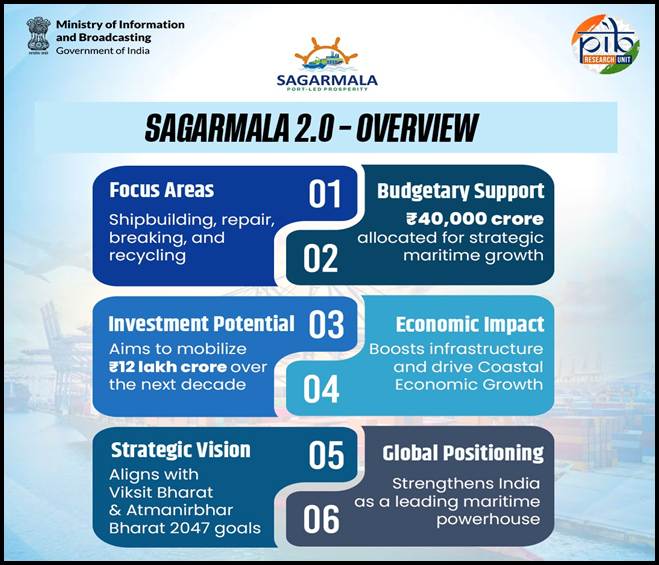
- 21 Mar 2025
In News:
The SagarmalaProgramme, launched by the Ministry of Ports, Shipping & Waterways (MoPSW) in 2015, aims to revolutionize India’s maritime sector by focusing on port-led development, logistics optimization, and coastal economic growth. With a 7,500 km coastline and strategic positioning on global trade routes, India is set to leverage its maritime potential for sustainable economic development.
Key Components of the SagarmalaProgramme
- Port Modernization & New Port Development: Upgrading existing ports and constructing new ones to enhance operational capacity, reduce bottlenecks, and improve efficiency.
- Port Connectivity Enhancement: Fostering seamless multi-modal logistics, including inland waterways and coastal shipping, to optimize time and cost of cargo transportation.
- Port-Led Industrialization: Establishing industrial clusters near ports, boosting economic growth while minimizing logistics costs.
- Coastal Community Development: Focusing on the sustainable development of coastal communities, through skill development, livelihood generation, and fisheries enhancement.
- Coastal Shipping & Inland Waterways Transport: Promoting eco-friendly cargo transportation via coastal and inland waterways to alleviate road and rail congestion.
Key Achievements and Outcomes
- Project Implementation: 839 projects worth ?5.79 lakh crore have been identified, with 272 projects already completed, amounting to ?1.41 lakh crore in investments.
- Growth in Coastal Shipping: Coastal shipping has surged by 118% over the last decade, significantly reducing logistics costs and emissions.
- Increased Inland Waterway Cargo: A 700% increase in inland waterway cargo, reducing congestion on roadways and railways.
- Improved Global Maritime Standing: Nine Indian ports now rank among the world’s top 100, with Vizag among the top 20 container ports globally.
Sagarmala 2.0 and Strategic Initiatives
- Sagarmala 2.0, launched with a ?40,000 crore budgetary support, aims to position India among the top five shipbuilding nations by 2047.
- It introduces a focus on shipbuilding, repair, recycling, and further port modernization, which will help India become a global maritime hub.
- The initiative targets a shipbuilding capacity of 4 million GRT and an annual port handling capacity of 10 billion metric tons.
- Additionally, the Sagarmala Startup Innovation Initiative (S2I2), launched in March 2025, seeks to promote innovation, research, and startups in the maritime sector.
- The program emphasizes green shipping, smart ports, and sustainable coastal development, providing funding, mentorship, and industry partnerships to boost technological advancement in the sector.
Funding and Project Implementation
- The SagarmalaProgramme follows a strategic and stakeholder-driven approach, involving central ministries, state governments, major ports, and other agencies.
- The funding structure utilizes a combination of public-private partnerships (PPP), internal resources of MoPSW agencies, and grant-in-aid for high-social-impact projects.
- The establishment of the Sagarmala Development Company Limited (SDCL) facilitates equity participation in key projects.
Future Outlook and Alignment with Vision 2047
Sagarmala 2.0 and its strategic initiatives are aligned with the Maritime Amrit Kaal Vision 2047 (MAKV), which aims to make India a leader in global maritime affairs. By enhancing port efficiency, expanding shipbuilding capacity, and fostering innovation, these initiatives will support India's vision of a Viksit Bharat (developed India) and Atmanirbhar Bharat (self-reliant India) by 2047.
Revised Rashtriya Gokul Mission (RGM)
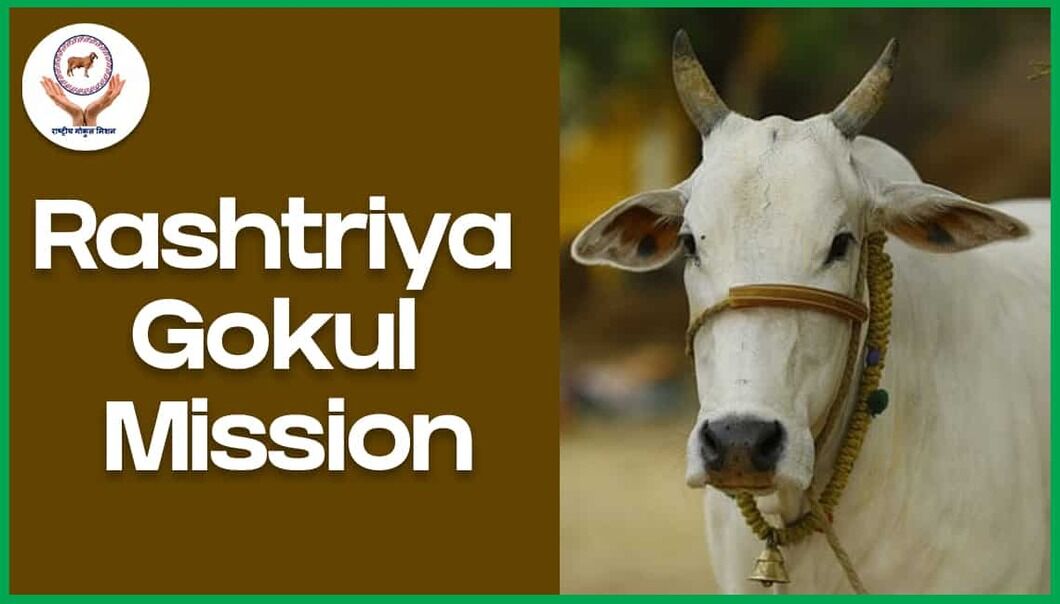
- 21 Mar 2025
In News:
The Union Cabinet has approved the implementation of the Revised Rashtriya Gokul Mission (RGM) for 2024–25 and 2025–26, with an enhanced financial outlay.
Background:
- Launched: December 2014
- Type: Central Sector Scheme under the Development Programmes
- Nodal Ministry: Ministry of Fisheries, Animal Husbandry & Dairying
- Primary Aim: Conservation and development of indigenous bovine breeds and enhancement of milk productivity through advanced breeding technologies.
Revised Allocation:
- Total Outlay: ?3,400 crore
- Additional Allocation: ?1,000 crore for 2024–25 and 2025–26
- Finance Commission Cycle: 15th (2021–22 to 2025–26)
Objectives of Revised RGM:
- Enhance productivity of bovines and sustainable milk production.
- Promote scientific breeding using high genetic merit (HGM) bulls.
- Expand Artificial Insemination (AI) coverage across India.
- Conserve indigenous cattle and buffalo breeds through genomic and reproductive technologies.
Key New Initiatives (2024–26):
- Heifer Rearing Centres:
- One-time assistance of 35% of capital cost.
- To establish 30 housing facilities with a total of 15,000 heifers.
- Interest Subvention Scheme:
- 3% interest subsidy on loans for purchasing HGM IVF heifers.
- Applicable to farmers borrowing from milk unions, banks, or financial institutions.
Major Achievements (as of 2023–24):
- Milk Production Increase: 63.55% rise in 10 years.
- Per Capita Milk Availability:
- 2013–14: 307 grams/day
- 2023–24: 471 grams/day
- Productivity Increase: 26.34% over the last decade.
Nationwide Artificial Insemination Programme (NAIP):
- Coverage: 605 districts with <50% baseline AI coverage.
- Animals Covered: 8.39 crore
- Farmers Benefitted: 5.21 crore
- Service: Free AI at farmer's doorstep.
Technological Interventions:
- IVF Labs: 22 labs set up across States and Universities.
- HGM Calves Born: 2,541 through IVF.
- Indigenous Technologies Developed:
- Gau Chip &Mahish Chip: Genomic chips by NDDB & ICAR-NBAGR.
- Gau Sort: Indian-developed sex-sorted semen technology by NDDB.
Significance:
- Strengthens Atmanirbhar Bharat in livestock genomics and AI.
- Enhances livelihoods of 8.5 crore dairy farmers.
- Preserves India’s indigenous bovine biodiversity.
- Promotes scientific cattle rearing and milk self-sufficiency.
BHIM-UPI Incentive Scheme 2024–25
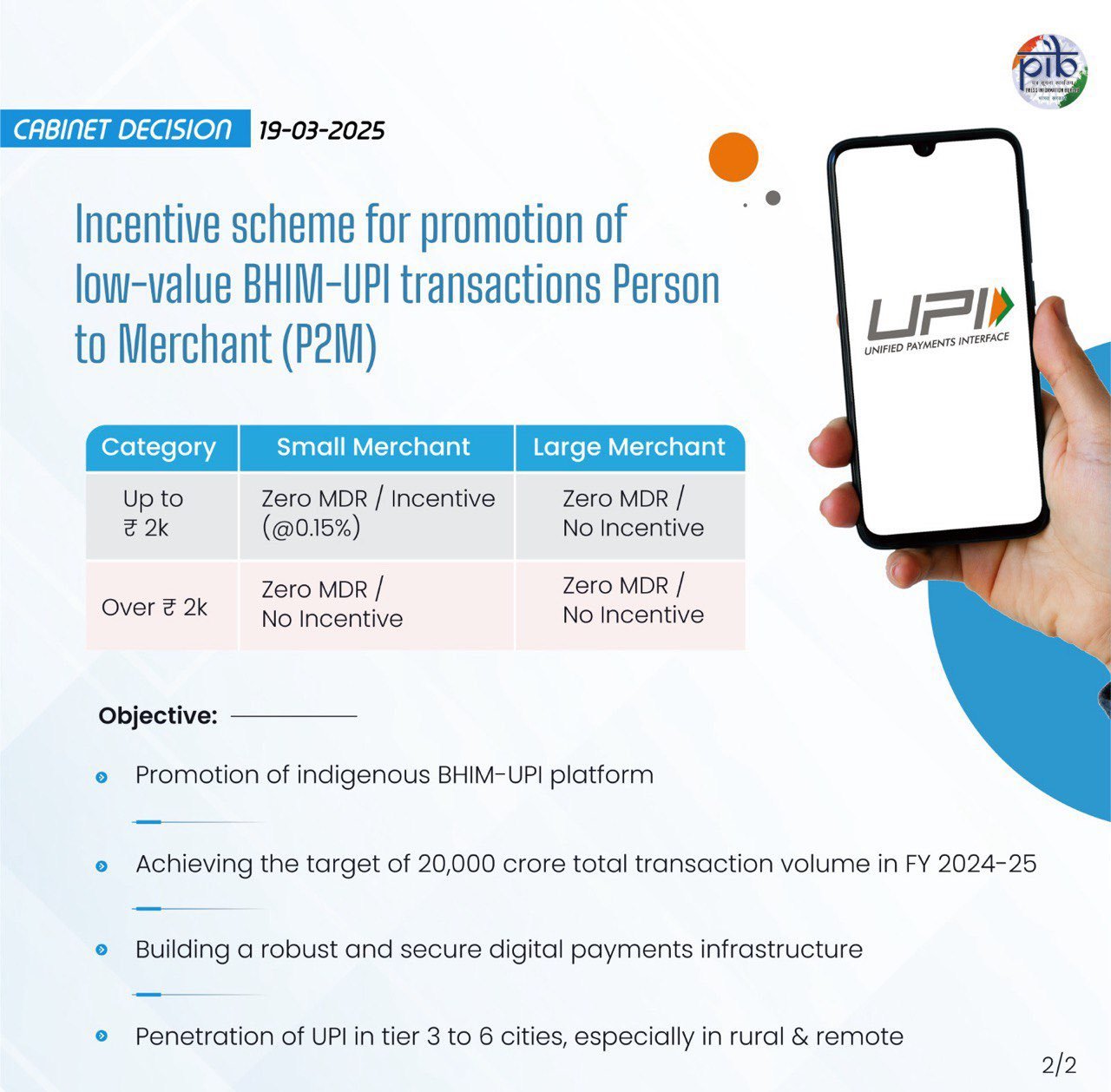
- 20 Mar 2025
In News:
The Union Cabinet, chaired by the Prime Minister, approved the Incentive Scheme for Promotion of Low-Value BHIM-UPI Transactions (Person-to-Merchant or P2M) for FY 2024–25 to encourage digital payment adoption, particularly among small merchants and in rural and remote areas.
Key Features of the Scheme:
- Duration: 1 April 2024 to 31 March 2025
- Outlay: ?1,500 crore
- Coverage: UPI (P2M) transactions up to ?2,000 for small merchants only
- Incentive Rate:0.15% per transaction value
- MDR (Merchant Discount Rate):
- Zero MDR for all UPI P2M transactions
- Incentive applicable only for small merchants on transactions ≤ ?2,000
Incentive Disbursement Conditions:
- 80% of claim amount: Paid upfront each quarter
- Remaining 20%: Conditional on:
- 10%: If acquiring bank’s technical decline < 0.75%
- 10%: If acquiring bank’s system uptime > 99.5%
Objective:
- Promote adoption of indigenous BHIM-UPI platform
- Achieve ?20,000 crore P2M transaction volume in FY 2024–25
- Expand UPI in Tier 3 to Tier 6 cities, especially rural areas
- Promote inclusive tools: UPI 123PAY (for feature phones), UPI Lite/LiteX (offline payments)
Expected Benefits:
- Cost-free UPI usage for small merchants (encouraging cashless transactions)
- Enhanced digital footprint helps merchants access formal credit
- Ensures round-the-clock availability of payment systems
- Strengthens financial inclusion and less-cash economy
- Balanced fiscal support from the government while encouraging systemic efficiency
Digital Payments Background:
- Since January 2020, MDR has been made zero for BHIM-UPI and RuPay Debit Cards via amendments to:
- Payments and Settlement Systems Act, 2007 (Section 10A)
- Income-tax Act, 1961 (Section 269SU)
- Previous incentive outlays (in ? crore):
Financial Year RuPay Debit Card BHIM-UPI Total
2021–22 432 957 1,389
2022–23 408 1,802 2,210
2023–24 363 3,268 3,631
What is BHIM-UPI?
- UPI: Real-time payment system developed by NPCI; allows instant money transfer between bank accounts via mobile apps.
- BHIM-UPI: Government-promoted UPI app launched in 2016.
- NIPL, NPCI’s international arm, is expanding UPI globally. UPI is accepted in Singapore, UAE, France, Sri Lanka, Nepal, and more.
Hmar-Zomi Clashes and Peace Efforts
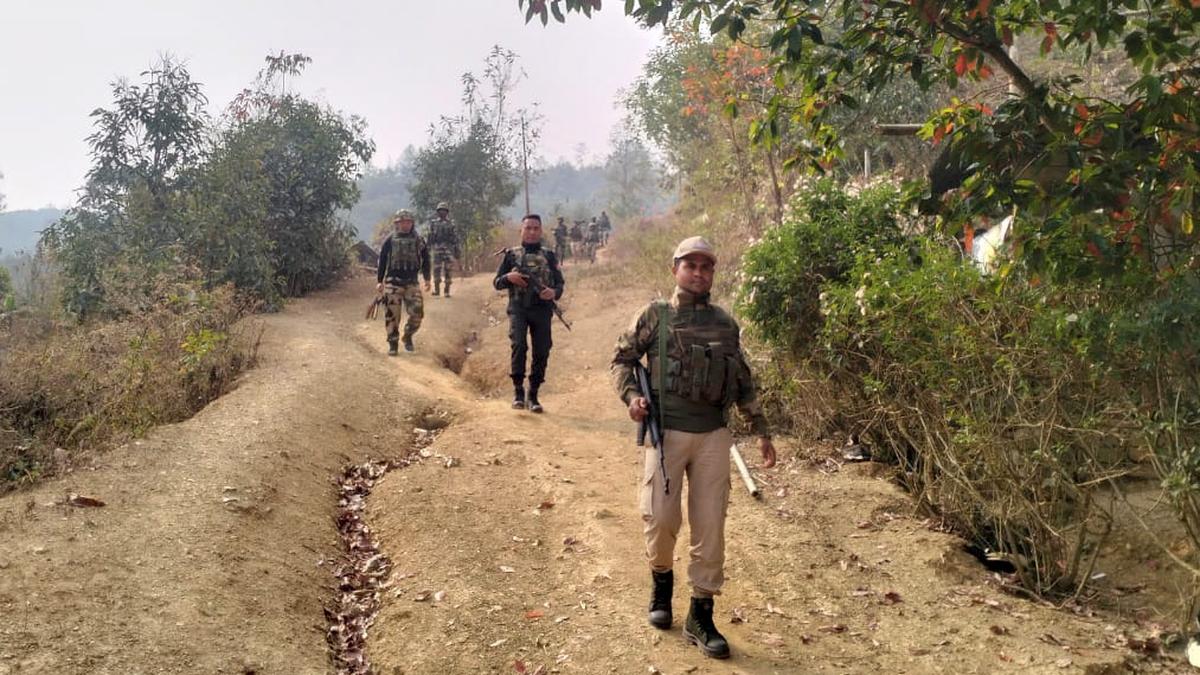
- 20 Mar 2025
In News:
Following inter-community clashes between the Hmar and Zomi tribes in Churachandpur district of Manipur, efforts have been initiated by tribal leaders to restore peace. These communities are constituents of the larger Kuki-Zo ethnic group, which has been in conflict with the non-tribal Meitei community since May 2023.
Key Developments:
- Peace Initiative:Leaders of the Hmar Inpui and Zomi Council, apex bodies of the two communities, issued a joint statement on March 18, 2025, expressing concern over the violence and agreed to:
- Lift the shutdown in Churachandpur.
- Resolve disputes through customary laws.
- Work jointly for peace and normalcy.
- Government Response:
- Restrictions under Section 163 of BNSS (BharatiyaNagarik Suraksha Sanhita) were imposed as a preventive measure.
- President’s Rule was imposed in Manipur on February 13, 2025, and the State Assembly was placed under suspended animation following Chief Minister N. Biren Singh's resignation.
Ethnographic Background
Zomi Tribe:
- Ethnic Affiliation: Tibeto-Burman (Mongoloid race).
- Distribution: Manipur, Mizoram, Nagaland, Assam; also in Myanmar and Bangladesh.
- Language: Belong to the Kuki-Chin (Kukish) group of languages.
- Religion: Predominantly Christian (Baptist, Presbyterian); formerly animistic.
- Features: Short stature, straight black hair, dark brown eyes.
Hmar Tribe:
- Ethnic Affiliation: Part of the Chin-Kuki-Mizo group, Mongoloid stock.
- Distribution: Manipur, Assam, Mizoram, Meghalaya, Tripura.
- Language: Hmar language under Kuki-Chin group (Tibeto-Burman family).
- Traditional Beliefs: Animism; now mostly Christian.
- Social Structure: Clan-based; village led by a chief called “Lal”.
- Occupation: Mainly slash-and-burn (jhum) cultivators.
- Migration History: Folk traditions trace origin to Sinlung, believed to be in China.
Audible Enclaves
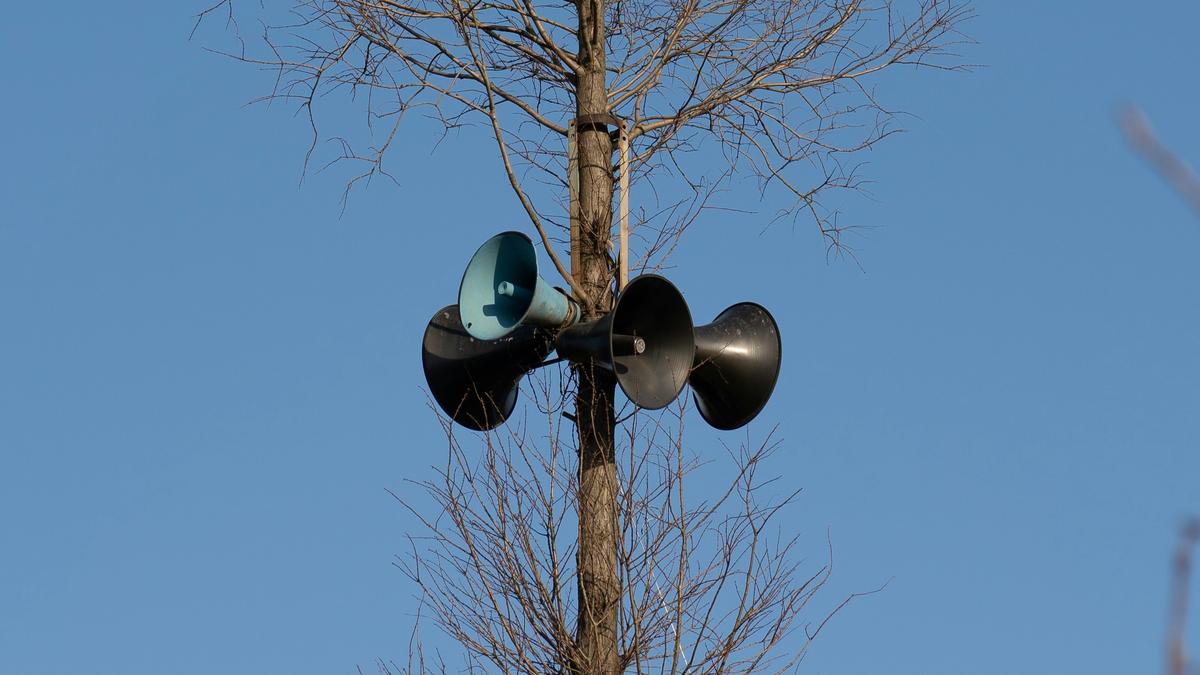
- 20 Mar 2025
Context:
Audible enclaves are highly localized zones of sound that remain undisturbed by ambient noise. These allow only specific individuals—usually within a defined space—to hear the sound, even in crowded or noisy environments.
Science Behind the Concept
- Nature of Sound:Sound travels as waves through a medium, causing its particles to vibrate back and forth.
- Frequency: The rate of this vibration determines the pitch of the sound.
- Higher frequency = Higher pitch.
- Diffraction: As sound propagates, it naturally spreads out. Higher-frequency waves tend to diverge more.
- Frequency: The rate of this vibration determines the pitch of the sound.
How Audible Enclaves are created
- Parametric Array Loudspeakers:These devices emit high-frequency ultrasonic waves modulated with an audio signal. As they move through air, the waves undergo self-demodulation, converting into audible sound in a narrow, focused beam. This beam is heard only by those directly in its path.
- Advanced Audible Enclaves (New Research – 2024):A study published in the Proceedings of the National Academy of Sciences (March 17, 2024) demonstrated a more precise technique:
- Two ultrasonic waves of slightly different frequencies are emitted.
- These are inaudible on their own.
- When they intersect, non-linear acoustic interactions occur at that point.
- This generates an audible sound wave only at the intersection point, creating an enclave audible only to nearby individuals.
Applications and Relevance
- Private Communication in public places.
- Augmented Reality and targeted advertising.
- Assistive technology for the hearing-impaired.
- Security and military operations, where discreet communication is required.
Tren de Aragua

- 20 Mar 2025
In News:
In March 2025, the United States deported 261 Venezuelans, including alleged members of the violent Venezuelan gang Tren de Aragua (TdA). The deportation invoked the Alien Enemies Act of 1798, used for the first time since World War II.
What is the Tren de Aragua (TdA)?
- Origin: Formed in 2014 inside Tocorón Prison in Aragua state, Venezuela.
- Evolution: Began as a prison gang under the “pran” system—where incarcerated crime bosses operated external criminal networks.
- Operations: Expanded amid Venezuela's economic crisis (post-2017) to Colombia, Peru, Chile, and later the United States, exploiting Venezuelan migrants.
- Criminal Activities: Drug trafficking, human trafficking, extortion, murder, and kidnapping.
- International Links: Chile accused the Venezuelan regime of facilitating the murder of a former opposition officer in 2023 via TdA operatives.
Presence in the United States
- Size: Estimated 5,000 global members; only a few hundred suspected in the U.S.
- Incidents: Linked to violent crimes in New York, Florida, Texas, Pennsylvania, California, and a high-profile case in Aurora, Denver.
- Designation: Labeled a "Transnational Criminal Organization" in 2023 by the Biden administration. Assets in the U.S. frozen and a $12 million reward announced for its leaders.
Alien Enemies Act (1798):
- Purpose: Allows the U.S. President to detain, deport, or restrict foreign nationals from hostile nations during war or invasion.
- Historic Use:
- War of 1812: Used against British citizens.
- WWI & WWII: Used for surveillance, restrictions, and internment of citizens from enemy nations (Japanese, Germans, Italians).
- Post-War: Used in 1948 to deport a Nazi operative; upheld by the U.S. Supreme Court.
Controversial Invocation in 2025
- First use since WWII to target non-state criminal actors (TdA).
- The White House termed TdA a "terrorist gang" and a "direct threat to national security".
- Claimed that illegal immigration and cartel activity constituted a modern “invasion”, thereby justifying use of the Act.
- Legal Backing: The Act remains constitutional and in force unless revoked.
- Criticism: Civil rights advocates argue its use may violate due process; calls for repeal by some lawmakers due to historical misuse.
Identification of Gang Members
- Criteria (ICE Directive, 2017): Gang tattoos, prior convictions, confessions, or identification by reliable sources.
- Due Process Concerns: Migrants can be deported even if gang membership is unproven before a judge.
National Wildlife Health Policy (NWHP)
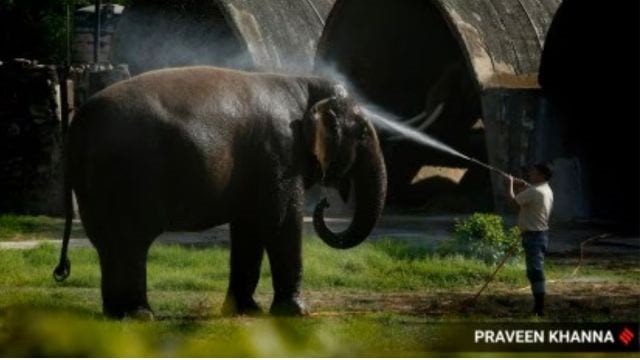
- 20 Mar 2025
In News:
In the aftermath of the COVID-19 pandemic, the Government of India is formulating the National Wildlife Health Policy (NWHP) to address the growing threat of zoonotic diseases through integrated wildlife health management. Over 60% of emerging infectious diseases in humans originate from animals, underscoring the importance of a "One Health" approach—integrating human, animal, and environmental health.
Key Objectives of NWHP
- Establish a comprehensive wildlife disease surveillance system.
- Strengthen diagnostic infrastructure and research capacity.
- Facilitate cross-sectoral collaboration among environment, agriculture, and animal husbandry ministries.
- Integrate existing animal and human health data systems with wildlife health information.
Institutional Framework & Implementation
- National Referral Centre for Wildlife (NRC-W):
- Inaugurated in Junagadh, Gujarat (March 2024).
- India’s first wildlife disease diagnostic and research centre.
- Will serve as a referral hub for investigating wildlife mortality and outbreak events.
- Wildlife Health Information System (WHIS):
- Proposed digital system for real-time disease data collection, reporting, and analysis.
- Will integrate with National Animal Disease Reporting System (NADRS) and National Animal Disease Referral Expert System (NADRES).
- Satellite Diagnostic Labs:To be established near important forest zones for timely wildlife disease detection and diagnosis.
- Community Engagement:Involves measures like cattle vaccination near national parks to reduce disease transmission risks.
Key Agencies Involved
- Central Zoo Authority (CZA): Nodal agency under the Wildlife Protection Act, 1972; responsible for policy coordination and implementation.
- Office of the Principal Scientific Adviser and IIT-Bombay: Supporting technical and policy formulation.
- Ernst & Young: Consultancy support.
- Ministry of Environment, Forest & Climate Change (MoEF&CC): Policy oversight.
Alignment with Existing Conservation Frameworks
- National Wildlife Action Plan (2017–31):
- Provides for 103 actions and 250 projects.
- Includes protocols for disease surveillance in protected areas and tiger reserves.
- Wildlife Protection Act, 1972: Provides legal basis for wildlife health regulation and zoonotic disease control.
Chhareda Panchayat Water Conservation Model
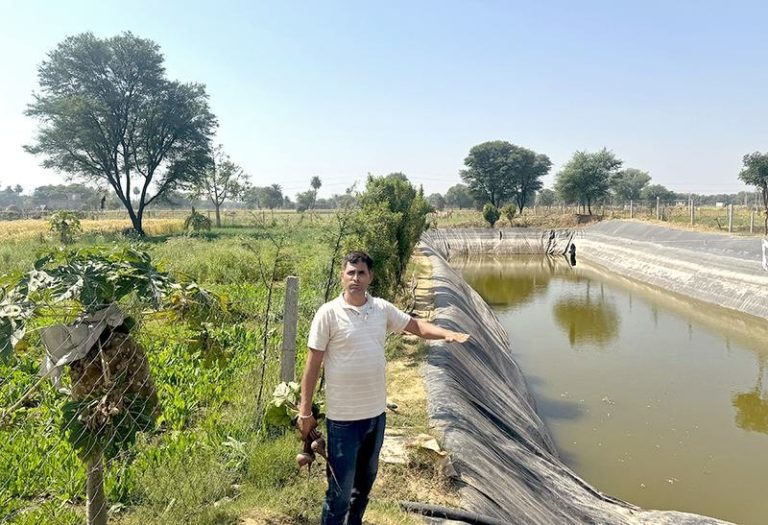
- 19 Mar 2025
In News:
Rajasthan’s Chhareda Panchayat in Dausa district has emerged as a leading example of effective water conservation, driven by a community-driven initiative that has significantly transformed agricultural practices and farmer livelihoods. The project, led by Vipra Goyal, an alumnus of IIT-Kharagpur, has revolutionized water usage in the region through the construction of 250 farm ponds.
Key Aspects:
- Objective:The model aims to address water scarcity and groundwater depletion through rainwater harvesting and the construction of farm ponds, reducing dependence on overexploited groundwater sources.
How Farm Ponds are Contributing to Water Conservation in Rajasthan
- Rainwater Harvesting:Farm ponds serve as storage systems for rainwater, minimizing reliance on deep, contaminated groundwater sources. This helps prevent the further depletion of underground water reserves.
- Year-Round Water Availability:The ponds provide consistent water supply for both kharif and rabi crops, ensuring that farmers can grow crops throughout the year without facing water shortages.
- Groundwater Conservation:By reducing the need to extract groundwater, this initiative has helped conserve approximately 30 crore litres of water annually, easing the pressure on local aquifers.
- Boosting Agricultural Productivity and Income:With reliable water sources, farmers have shifted from subsistence farming to growing cash crops, which has resulted in a collective increase of about ?5 crore in household incomes.
- Reduced Water Pollution:The initiative avoids the use of groundwater contaminated with harmful substances like arsenic and fluoride, which are prevalent in many areas of Rajasthan.
- Sustainability and Climate Resilience:The farm ponds offer a climate-resilient solution, ensuring that agriculture in water-scarce regions is sustainable even in the face of erratic rainfall patterns.
- Cost-Free Construction:The construction of the ponds has been facilitated through CSR funds and government schemes, making the project cost-free for farmers.
Huajiang Grand Canyon Bridge
- 19 Mar 2025
In News:
China is set to unveil the Huajiang Grand Canyon Bridge, a record-breaking steel truss suspension bridge that will become the world’s highest bridge. The bridge, located in Zhenfeng County, Guizhou Province, is part of the Shantou–Kunming Expressway, connecting the coastal city of Shantou with Kunming, the capital of Yunnan Province.
Key Facts about the Bridge:
- Height: The bridge will stand 625 meters (2,051 feet) above the Beipan River, 200 meters taller than the Eiffel Tower (at 330 meters).
- Length: Spanning 2,890 meters (9,482 feet) in total.
- Construction Period: Started on January 18, 2022, and took 3.5 years to complete.
- Cost: Estimated at £216 million (?2,200 crore).
- Travel Time Reduction: It will reduce the travel time across the canyon from 60 minutes to just 2 minutes.
Design and Engineering:
- Steel Framework: The steel trusses of the bridge weigh approximately 22,000 tons, about three times the weight of the Eiffel Tower.
- Engineering Feat: The bridge is a significant engineering achievement, showcasing China’s capabilities in bridge construction. The structure’s design and dramatic location are expected to attract tourists, bolstering the region’s economy.
Strategic and Economic Impact:
- The bridge is a major transportation infrastructure project aimed at improving connectivity in the remote Guizhou Province, a mountainous region that already hosts many of the world’s tallest bridges.
- Tourism and Regional Growth: Besides serving as a crucial transportation link, the bridge is expected to boost tourism and contribute to economic development in the region.
China’s Engineering Milestones:
- The Huajiang Grand Canyon Bridge surpasses the Millau Viaduct in France (343 meters), which previously held the record for the tallest bridge.
- China has been a leader in the construction of the world’s tallest bridges, further solidified by this record-breaking structure.
International Big Cat Alliance (IBCA)
- 19 Mar 2025
In News:
The International Big Cat Alliance (IBCA), a treaty-based intergovernmental organisation dedicated to the conservation of seven major big cat species, has officially signed an agreement with the Government of India, establishing India as the permanent host of its headquarters and secretariat.
Background and Launch
- Launched: April 2023 by Prime Minister Narendra Modi during the 50th anniversary celebrations of Project Tiger.
- Objective: To facilitate global cooperation for the conservation of seven big cats:Tiger, Lion, Leopard, Snow Leopard, Cheetah, Puma, andJaguar.
- The IBCA is implemented through the National Tiger Conservation Authority (NTCA) under the Ministry of Environment, Forest and Climate Change (MoEFCC).
International Status and Membership
- The IBCA became a treaty-based intergovernmental alliance after five countries ratified the framework agreement:India, Liberia, Eswatini, Somalia, andNicaragua.
- India formally joined the IBCA in September 2023.
- The alliance is open to all UN Member States, including:
- Range countries (where big cats are native), and
- Non-range countries that wish to support conservation efforts globally.
Headquarters and Agreement
- On March 28, 2024, the Union Cabinet approved the establishment of the IBCA headquarters in India.
- An agreement was signed in May 2024 between the IBCA and the Indian government, outlining:
- Privileges and immunities for IBCA personnel,
- Visa facilitation, and
- Operational and legal provisions for the headquarters.
Funding and Support
- India has committed a total of ?150 crore (2023–2028) for:
- Creating a corpus fund,
- Building infrastructure, and
- Meeting recurring expenditures over five years.
NASA’s Curiosity Rover
- 19 Mar 2025
In News:
NASA's Curiosity Rover has made a significant breakthrough by detecting carbon-bearing minerals on Mars, offering the first direct evidence of a potential carbon cycle on the planet. This finding adds a crucial piece to the puzzle of Mars' climatic and geological history.
Curiosity Rover: Mission Overview
- Launch Date: 26 November 2011
- Landing Date: 5 August 2012 (via sky crane system)
- Mission: Part of NASA’s Mars Science Laboratory (MSL) initiative
- Power Source:Radioisotope Thermoelectric Generator (RTG) using plutonium-238, unlike solar-powered predecessors
- Size and Capabilities: Approximately 3 meters long and 900 kg in weight, equipped with an onboard chemical laboratory for rock analysis
Scientific Objectives
- Investigate whether Mars ever supported microbial life
- Analyze the planet’s climatic history
- Study Martian geology, especially sedimentary layers
- Contribute data for future human missions to Mars
Key Scientific Discovery
- The finding occurred while Curiosity was exploring an ancient lakebed region in Gale Crater, over an 89-meter-long stretch.
- It drilled into sulfate-rich rocks and discovered siderite (a carbonate mineral composed of iron, carbon, and oxygen), marking the first detection of this mineral on Mars.
- Rocks containing 5–10% siderite by weight imply that substantial amounts of ancient atmospheric CO? may have been locked within the Martian crust, rather than being lost to space.
- The presence of iron oxyhydroxides in the same rocks suggests that acidic water interactions could have dissolved siderite, potentially releasing carbon dioxide back into the atmosphere—indicating a slow and limited carbon cycle on Mars.
Colossal Squid
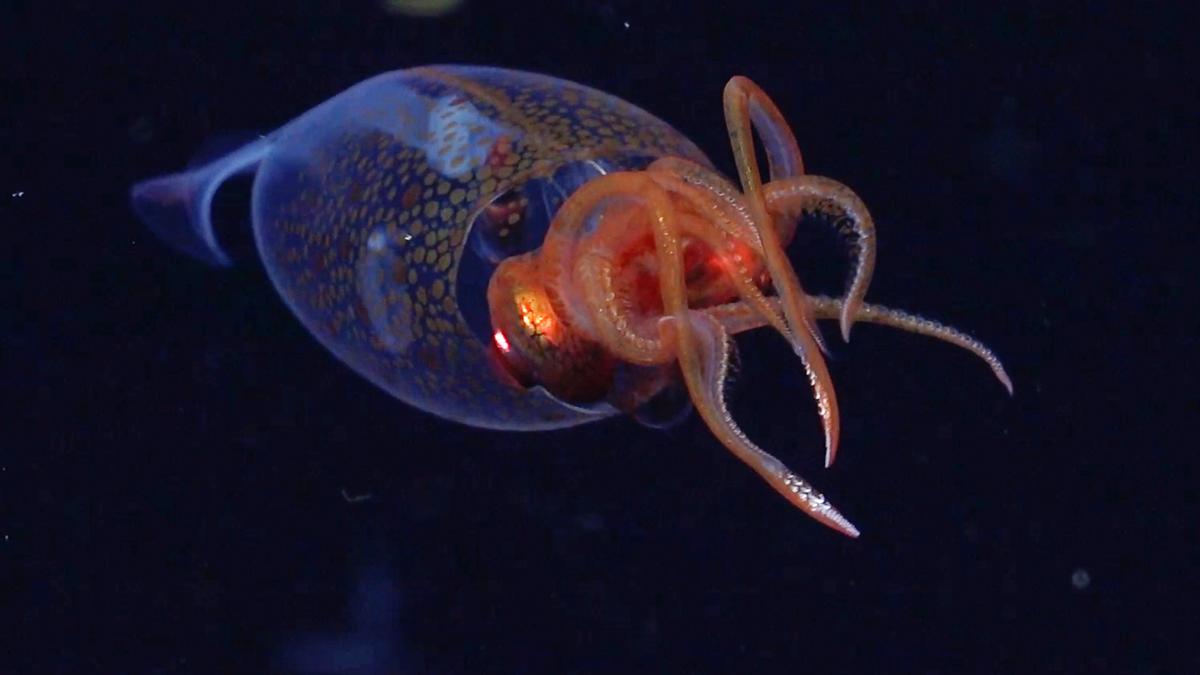
- 19 Mar 2025
In News:
In a landmark moment for marine biology, scientists have captured the first-ever footage of a colossal squid in its natural deep-sea habitat. The sighting was made by an international research team using a remotely operated submersible in the South Atlantic Ocean, near the South Sandwich Islands, and was announced by the Schmidt Ocean Institute in April 2025.
About the Colossal Squid
- Scientific Name:Mesonychoteuthishamiltoni
- Distribution: Found in the cold, deep waters of the Southern Ocean near Antarctica
- IUCN Status:Least Concern
The colossal squid is among the largest and most elusive invertebrates on Earth. The filmed specimen was a juvenile about 30 cm (1 foot) long, observed at a depth of 600 meters. However, fully grown adults can reach up to 7 meters (23 feet) in length and weigh around 500 kg.
Key Features
- Body: Tube-shaped and soft-bodied, similar to octopuses but far more massive
- Arms & Tentacles: Equipped with suckers and sharp, swivelling hooks — a feature unique to the species
- Eyes: Possess the largest eyes known in the animal kingdom, aiding visibility in the pitch-dark ocean depths
- Coloration:
- Juveniles are nearly transparent, giving them a glassy, ghost-like appearance
- Adults become opaque, with dark red or purple hues and muscular limbs
Scientific Importance & Recent Discovery
- This deep-sea sighting comes almost a century after the species was first identified, and confirms long-standing hypotheses based on carcasses found in the stomachs of whales and seabirds.
- The team is now testing improved camera systems to attempt capturing footage of an adult colossal squid in action.
Vehicle-to-Grid (V2G) Technology
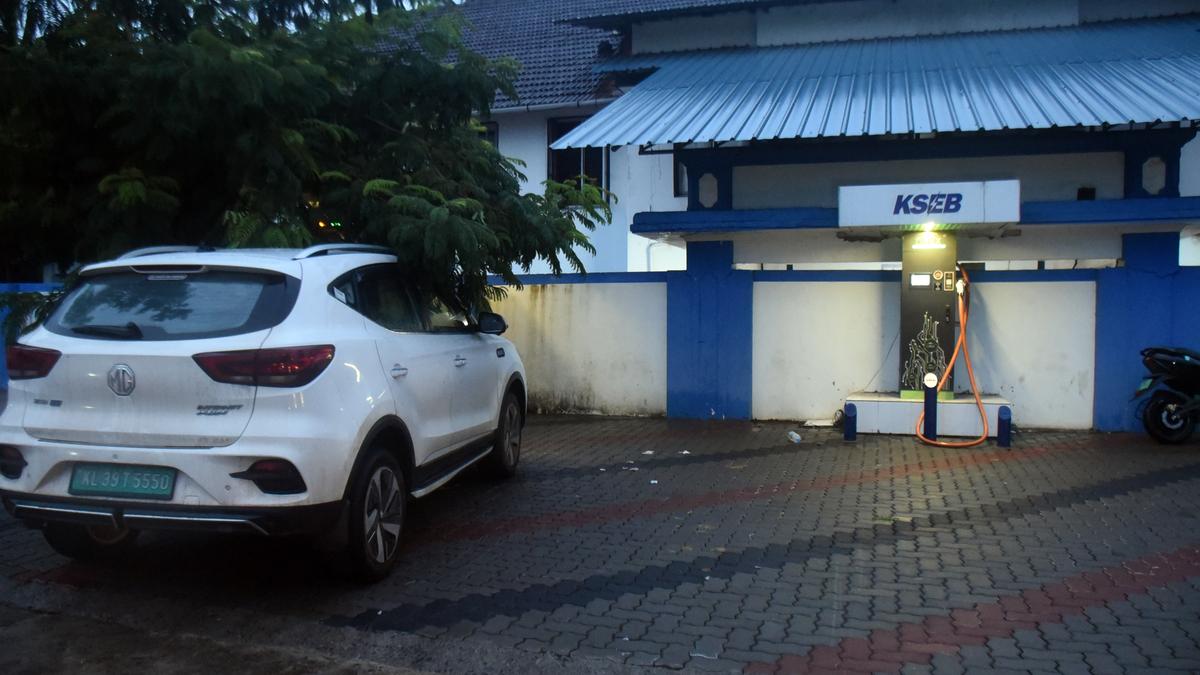
- 18 Mar 2025
In News:
Vehicle-to-Grid (V2G) is an innovative energy solution that allows Electric Vehicles (EVs) to not only draw power from the grid (charging) but also send excess stored electricity back to the grid (discharging) when not in use. This bi-directional energy flow creates a unique opportunity to support grid stability, especially when renewable energy (RE) sources like solar and wind are intermittent. When connected via bi-directional chargers, EV batteries can act as decentralized storage systems, offering a potential solution to address the challenges posed by renewable energy integration and peak demand periods.
Global Adoption and Benefits of V2G
V2G technology has gained significant traction in developed EV markets like Europe and the U.S., where it is seen as a cost-effective solution for distributed energy storage.
- In the U.K. and the Netherlands, EV owners are compensated for supplying excess energy to the grid, particularly during peak hours.
- In California, EVs are integrated into the ancillary services market, helping improve grid reliability.
- Additionally, V2G technologies have shown promise in offering emergency power during natural disasters and grid failures, proving to be an essential tool for enhancing grid resilience.
V2G in India: Current Status and Challenges
In India, V2G technology is still in its nascent stages. While there is a growing adoption of EVs and charging infrastructure, integrating these vehicles into the national grid remains a challenge. The electricity market in India is not yet fully equipped to support decentralized energy solutions like V2G. The current grid structure, characterized by variable RE generation and mismatches in supply and demand, requires significant regulatory and structural changes for successful V2G integration.
The Kerala State Electricity Board (KSEB) and the Indian Institute of Technology Bombay (IIT Bombay) have launched a pilot V2G project to assess the feasibility of this technology in the state. This project will explore how EVs can help support grid demand during peak hours, particularly when solar energy generation is low, as Kerala experiences both rapid EV adoption and increasing rooftop solar installations.
Key Features of V2G
- Charging (G2V): When an EV is charged, it functions as a load on the grid. This process can be managed through Time of Use (ToU) electricity tariffs, which incentivize charging during off-peak hours to reduce grid stress.
- Discharging (V2G): When EV batteries discharge power back to the grid, they act as distributed energy resources. This is especially valuable during periods of high demand or when renewable energy generation is insufficient.
- Decentralized Energy Storage: V2G enables EVs to serve as decentralized storage units, reducing the dependency on centralized storage systems and making the grid more resilient and efficient.
Advantages for the Indian Power Sector
- Grid Stability: V2G can help modulate the power flow in the grid by reducing the impact of variable RE generation. It also helps to stabilize grid operations during peak demand periods.
- Support for Renewable Energy: By enabling EVs to store excess solar energy during the day, V2G can assist in using this stored power during nighttime or when renewable energy generation is low, contributing to true decarbonization.
- Smart Charging: Integrating V2G with smart charging systems can help optimize energy use, ensuring that EVs charge during periods of high renewable energy generation and discharge during peak demand.
Potential for Wider Adoption
The Kerala pilot project is expected to pave the way for broader V2G implementation across India. The project aims to test how EVs can provide support during peak demand, particularly when solar power generation is unavailable. The integration of smart charging solutions and V2G will help mitigate concerns about increasing electricity demand due to the growing number of EVs. Additionally, incentives for EV owners to participate in V2G systems can lead to cost-effective solutions for grid management.
The Indian government, through the Central Electricity Authority (CEA), has already initiated steps to frame guidelines for reverse charging (V2G). With the increasing adoption of EVs and solar power, V2G has the potential to become a cornerstone of India's energy future.
Operation ATALANTA
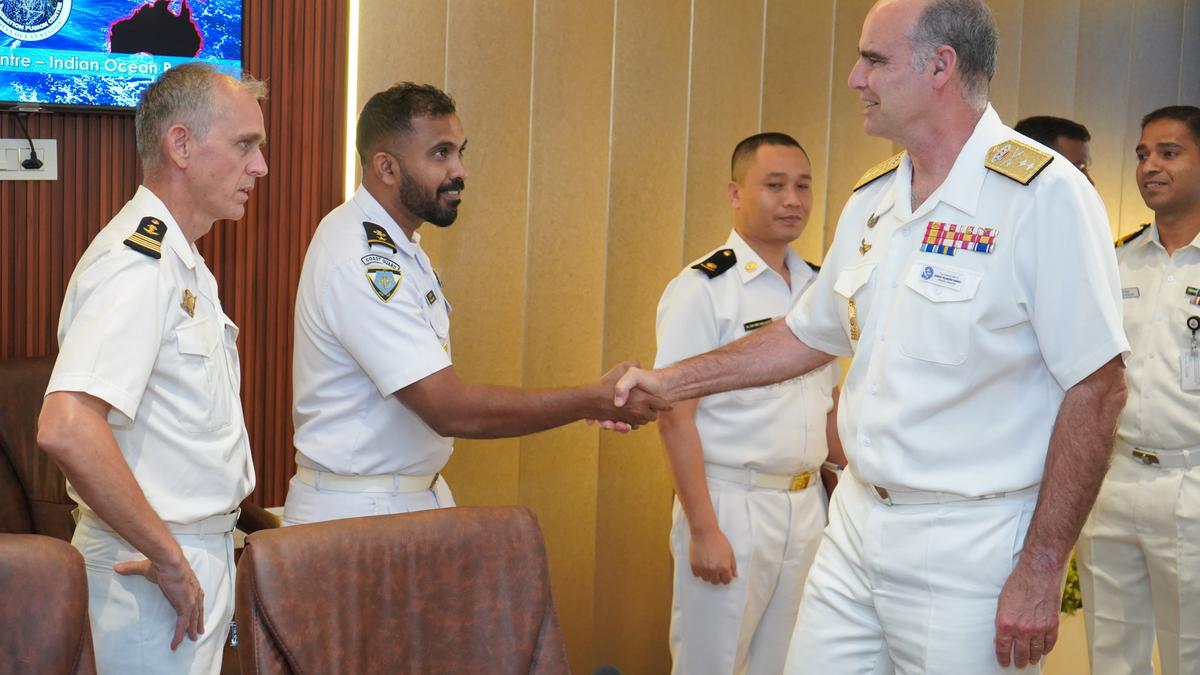
- 18 Mar 2025
In News:
The European Union Naval Force (EUNAVFOR) Operation ATALANTA has proposed a significant joint anti-piracy naval exercise with the Indian Navy, scheduled for the end of May 2025. This initiative reflects the growing strategic cooperation between India and the European Union in maritime security, particularly in the Western Indian Ocean and the Red Sea.
Key Highlights
Proposed Exercise:
- The exercise, if approved, will involve two European warships and the Indian Navy practicing advanced counter-piracy operations, tactical manoeuvres, and inter-naval communications.
- This drill goes beyond the routine Passage Exercises (PASSEX) and aims to enhance interoperability, coordination, and mutual confidence between the two navies.
Strategic Objectives:
- Strengthen maritime security in the Indian Ocean, ensuring it remains a free, open, sustainable, and inclusive area.
- Address resurgent piracy threats, especially off the Horn of Africa, amid ongoing instability in the Red Sea due to Houthi rebel activity.
- Build operational synergy to respond swiftly to piracy incidents-EUNAVFOR claims the capability to tackle pirate cases within 48–72 hours.
Recent Developments:
- Piracy incidents near the Horn of Africa have declined recently, but the threat persists, necessitating continued vigilance and cooperation.
- In 2024, joint anti-piracy efforts led to the apprehension of 70 suspected pirates, with the Indian Navy responsible for 44 captures.
- The Indian Navy is recognized as a major actor in the region, with both sides regularly coordinating through maritime information fusion centers.
Operation ATALANTA: Overview
Aspect Details
Launch Year 2008
Initial Focus Preventing piracy and armed robbery off the Somali coast
Expanded Mandate - Protecting World Food Programme (WFP) vessels
- Enforcing UN arms embargo on Somalia
- Monitoring drug and arms trafficking
- Combating Illegal, Unreported, and Unregulated (IUU) fishing
- Disrupting illicit charcoal trade
Area of Operations Western Indian Ocean and Red Sea
Recent Activities - Joint drills with Indian Navy
- Successful coordination in anti-piracy operations, e.g., MV Ruen hijacking
India–EU Maritime Engagement: Significance
- Geopolitical Context:
- The Indian Ocean is a critical global trade route, and its security is vital for international commerce.
- The resurgence of piracy and instability in the Red Sea has heightened the need for robust maritime partnerships.
- Strategic Partnerships:
- The EU and India share a vision of maintaining maritime order and security.
- The vastness of the Indian Ocean requires significant assets and robust logistics, making cooperation essential.
- Professional Interactions:Encounters with other navies, including China, are described as professional, underscoring the importance of multilateral engagement.
Hyperloop Project
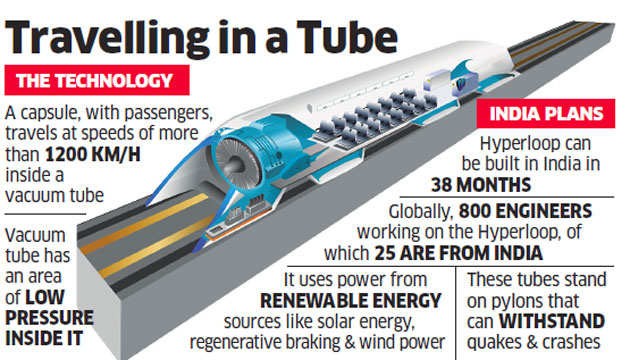
- 18 Mar 2025
In News:
India is moving closer to realizing ultra-high-speed transportation with the development of indigenous Hyperloop technology. The Ministry of Railways, has announced that Integral Coach Factory (ICF), Chennai will develop the electronics component for the country’s Hyperloop initiative. This decision follows promising test results at IIT Madras, which hosts the longest Hyperloop testing facility in Asia.
What is Hyperloop?
Hyperloop is a next-generation, ultra-fast transportation system that combines magnetic levitation (maglev) and near-vacuum tubes to enable passenger pods to travel at speeds up to 1,220 km/h. It was first proposed by Elon Musk in 2013 through the Hyperloop Alpha white paper and has since evolved into a global open-source research initiative.
Working Mechanism:
- Low-pressure tubes drastically reduce air resistance.
- Magnetic levitation allows pods to float without touching surfaces, minimizing friction.
- Electromagnetic propulsion moves pods forward efficiently.
Key Features:
- Highly energy-efficient and sustainable, with low emissions.
- Can surpass air travel speeds on shorter routes.
- Reduces road congestion, travel time, and noise pollution.
India’s Hyperloop Developments:
- Institutions Involved:
- IIT Madras – Developed the 410-meter test facility.
- Avishkar Hyperloop Team – Leading design and innovation.
- ICF Chennai – To develop electronics and technical components.
- Government Support:
- The Railway Ministry has provided financial and technical support.
- The testing system uses fully indigenous technology.
Challenges Ahead:
Despite its promise, Hyperloop faces significant hurdles:
- High infrastructure costs.
- Technical challenges in maintaining vacuum conditions.
- Safety concerns due to the high speed and pressure system.
Sarthi and Pravaah Initiatives
- 18 Mar 2025
In News:
The Reserve Bank of India (RBI) was awarded the Digital Transformation Award 2025 by Central Banking (UK) for its in-house digital innovations — Sarthi and Pravaah — marking a significant step in the digitization of internal and external regulatory processes.
Sarthi System (Launched January 2023)
- Objective: Digitize RBI’s internal workflows and reduce reliance on paper-based systems.
- Key Features:
- Secure document storage and sharing for over 13,500 employees across 40+ locations.
- Enhanced record management and data analysis through dashboards and reports.
- Automation of internal tasks such as approvals, tracking, and documentation.
- Support Infrastructure:
- SarthiPathshala: Online and in-person training module for staff.
- SarthiMitras: Designated personnel in each office to provide user assistance.
Pravaah System (Launched May 2024)
- Objective: Facilitate external submission of regulatory applications digitally.
- Key Features:
- Integration with Sarthi for streamlined processing.
- Supports 70+ regulatory application types across 9 departments.
- Enhanced efficiency, transparency, and real-time tracking.
- Centralized cybersecurity and monitoring framework.
- Impact:
- 80% increase in monthly application submissions.
- Major reduction in delays caused by manual and paper-based procedures.
Significance
- Reflects India’s push toward governance digitization and institutional efficiency.
- Demonstrates how indigenous technology solutions can modernize financial regulation and public administration.
Shishtachar Squads
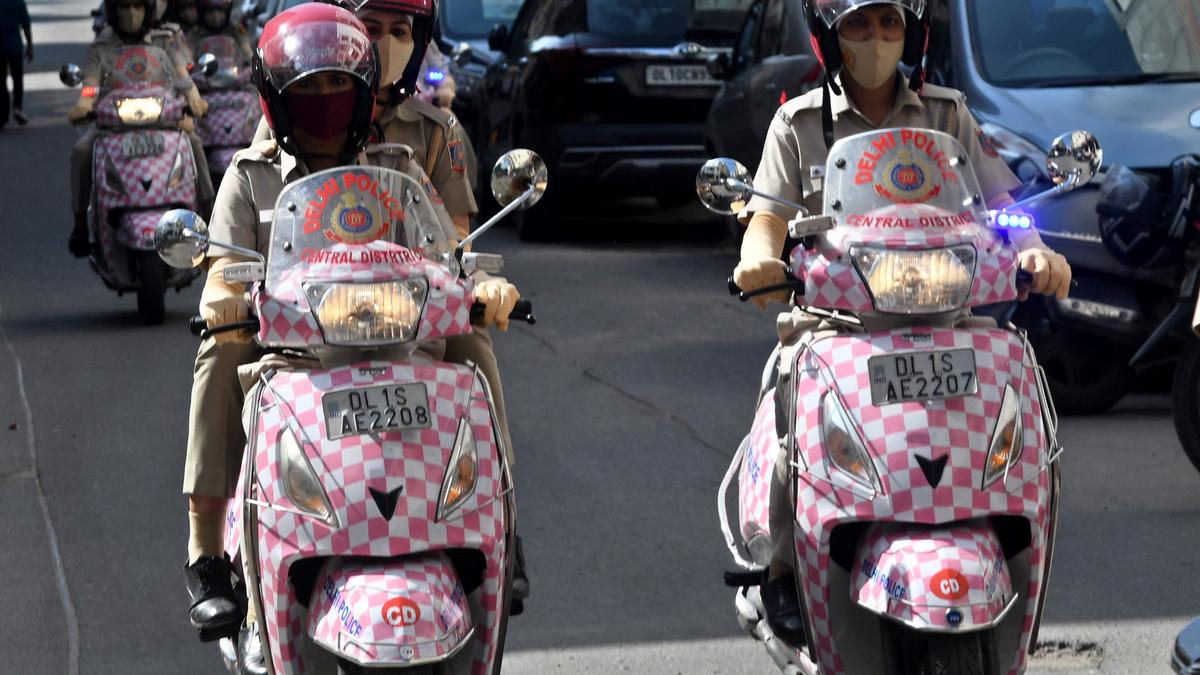
- 18 Mar 2025
In News:
To enhance women's safety in public spaces, Delhi Police has launched district-wise Shishtachar Squads, a dedicated initiative to curb eve-teasing and harassment. The move comes in line with the Bharatiya Janata Party’s pre-poll promise and is inspired by Uttar Pradesh’s Anti-Romeo Squads.
Key Features:
- Purpose: To prevent, intervene, and assist in cases of sexual harassment against women in public areas.
- Deployment: 30 squads have been formed across Delhi, with at least two squads in each district.
- Composition: Each 12-member squad includes:
- 1 Inspector (Head)
- 1 Sub-Inspector
- 4 Female Constables
- 5 Male Constables
- 1 Constable from the Anti-Auto Theft Squad (technical support)
- Supervision: Squads function under the ACP of the district's Crime Against Women (CAW) Cell.
Operational Strategy:
- Patrolling: Daily drives in at least two vulnerable spots identified by District DCPs.
- Surprise Checks: Plainclothes officers inspect public transport and engage with DTC staff, market associations, and RWAs.
- Victim-Centric Approach: Emphasis on sensitive handling of cases, ensuring swift action under relevant provisions of the Bharatiya Nyaya Sanhita (e.g., Sections 74 for molestation and 78 for stalking).
- Monitoring:
- Weekly Reports by ACP-CAW submitted to the DCP of the Special Police Unit for Women and Children (SPUWAC).
- Monthly Evaluations based on feedback from schools, RWAs, MWAs, and control rooms.
India’s Space Docking Capability

- 17 Mar 2025
In News:
Recently, ISRO successfully demonstrated autonomous space docking and undocking with its Space Docking Experiment (SpaDEx), making India the fourth country—after the USA, Russia, and China—to achieve this advanced space capability.
Two satellites, SDX01 (Chaser) and SDX02 (Target), were launched into a 470 km orbit. From a starting separation of 20 km, they were autonomously maneuvered, docked using an indigenous androgynous docking mechanism, and later undocked after two months of in-orbit operation.
What is Space Docking and Why It Matters?
Docking is the process where two spacecraft in orbit are brought together and joined. Undocking is the controlled separation of these joined vehicles. These procedures are vital for:
- Assembling large structures (e.g., space stations) in orbit, bypassing launch weight limits.
- Orbital servicing of satellites (repairs, refueling).
- Interplanetary missions requiring in-space assembly and resupply.
- Crewed missions to space stations and planetary bodies (e.g., Moon, Mars).
Historical Context
- 1966 (USA): First manual docking by NASA’s Gemini VIII (Neil Armstrong with Agena).
- 1967 (USSR): First autonomous docking using Kosmos 186 & 188.
- 2011–12 (China): First unmanned and then crewed docking.
- 2025 (India): Successful autonomous docking and undocking via SpaDEx.
Strategic and Technological Significance for India
Future Missions:
- BharatiyaAntariksh Station (BAS) by 2035 and Human Moon Mission by 2040 will rely heavily on in-orbit docking and assembly.
- Chandrayaan-4, aiming to return lunar samples, will use docking systems for orbital rendezvous and return modules.
Global Space Economy
- Positions ISRO as a leader in modular satellite design, orbital assembly, and international collaborations.
- Enables NewSpace India Ltd. (NSIL) to attract commercial contracts for space stations, satellite servicing, and deep-space ventures.
Domestic Technological Advancements
- Promotes indigenous innovation in docking systems, AI-driven autonomous navigation, robotics, and in-space power sharing.
- Supports R&D in microgravity, space manufacturing, and even space agriculture (e.g., orbital seed germination experiments).
Strategic and Diplomatic Impact
- Enhances India’s soft power and strengthens ties with space agencies like NASA and ESA.
- Contributes to space security by enabling orbital refueling and satellite servicing during emergencies.
- Offers collaborative platforms for BRICS and developing countries through BAS.
Capacity Building
- Encourages STEM education and youth engagement via initiatives like YUVIKA.
- Expands India’s aerospace industrial base, creating skilled jobs and fostering innovation.
Birefringence
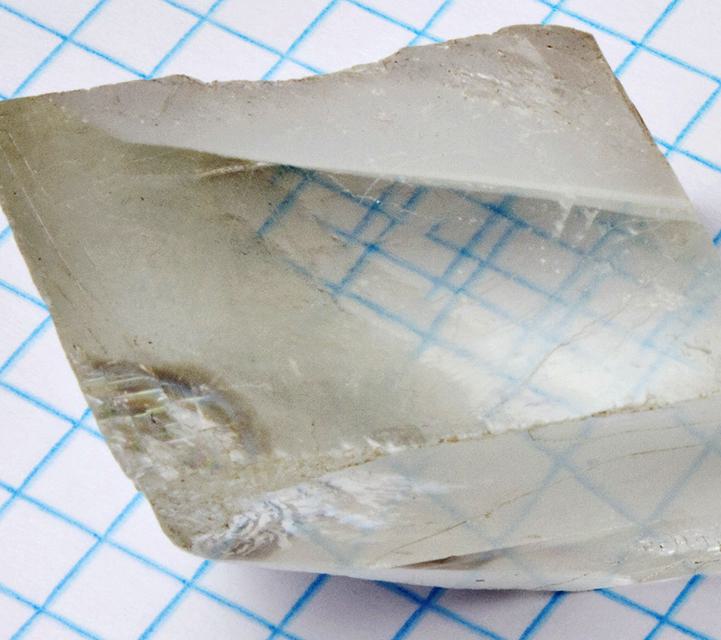
- 17 Mar 2025
Context:
Birefringence, or double refraction, is an optical phenomenon observed in certain anisotropic materials where a single light ray splits into two rays upon entering the material. Each ray travels at a different speed and experiences a different refractive index based on the direction of light propagation and its polarization.
Refraction vs Birefringence
- Refraction is the bending of light as it passes from one medium to another due to a change in speed. It is governed by the refractive index, defined as the ratio of the speed of light in a vacuum to its speed in the medium.
- Birefringence occurs when a material has multiple refractive indices in different directions, causing light to split into two rays.
Key Terms
- Refractive Index:
- Vacuum: 1
- Air: ≈1.0003
- Glass: ≈1.5
- Diamond: ≈2.4
- Polarization: The direction in which the light’s electric field oscillates. It influences how light behaves in birefringent media.
Types of Materials
- Isotropic Materials:
- Structure is uniform in all directions.
- Refractive index is the same regardless of direction.
- Examples: Glass, Sodium Chloride (NaCl).
- Anisotropic Materials:
- Structure varies along different crystal axes.
- Show different refractive indices in different directions.
- Exhibit birefringence.
- Examples: Calcite, Quartz, Mica, Tourmaline.
Sources of Birefringence
- Natural Birefringent Materials: Calcite, Mica, Quartz.
- Synthetic Birefringent Materials: Barium borate, Lithium niobate.
- Induced Birefringence: Can be generated by applying mechanical stress, electric, or magnetic fields to otherwise non-birefringent materials.
Applications of Birefringent Materials
- Liquid Crystal Displays (LCDs)
- Medical and Polarising Microscopes
- Optical Switches and Waveplates
- Laser Technology
- Nonlinear Optics (e.g., Frequency Converters)
U.S. airstrikes in Yemen
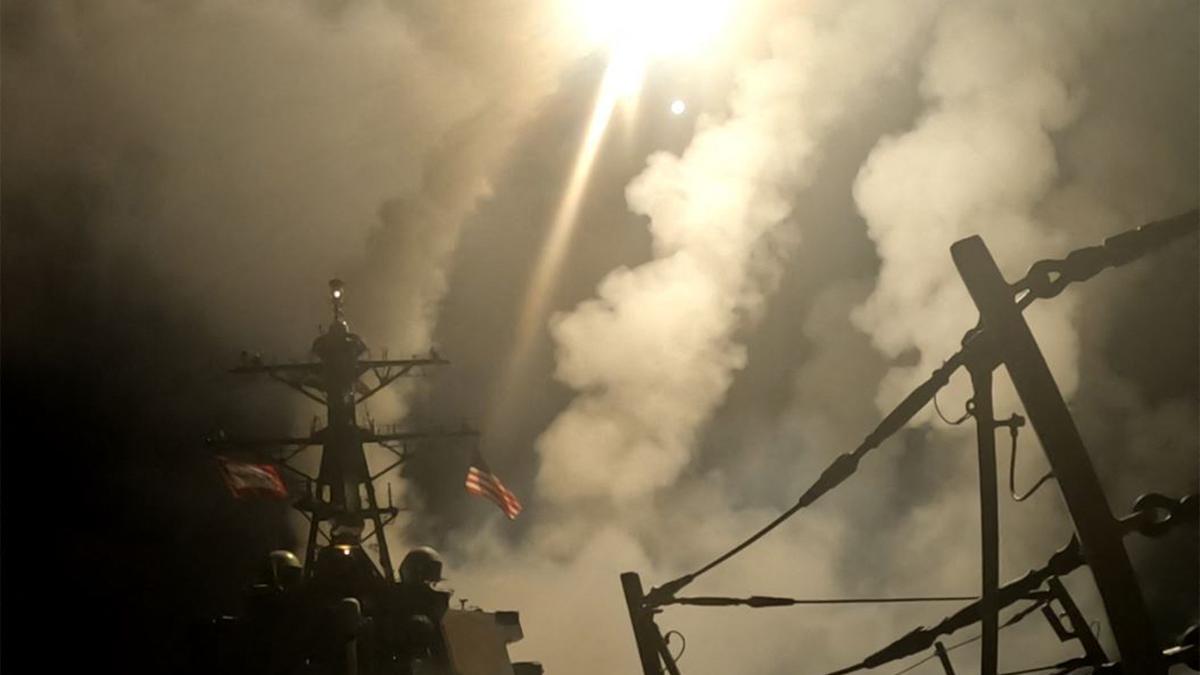
- 17 Mar 2025
In News:
In March 2025, the United States launched a series of airstrikes on Houthi-controlled areas in Yemen, targeting bases, missile defenses, and key leadership. The operation aimed to neutralize threats to international shipping and assert freedom of navigation through the vital Bab-el-Mandeb Strait. The Houthis, backed by Iran, vowed retaliation, intensifying tensions in an already volatile region.
Who are the Houthis?
- Sect and Origin: Houthis belong to the Zaidi Shia sect, primarily based in Yemen’s northwestern Sa’dah province. The movement originated in the 1990s as a sociopolitical rebellion against President Ali Abdullah Saleh’s regime.
- Role in Yemen’s Civil War: Since 2014, the Houthis have controlled large parts of Yemen, including the capital, Sana’a. They are one of the main belligerents in the civil war, opposing the internationally recognized Yemeni government (backed by Saudi Arabia and the U.S.).
- Foreign Links: The Houthis are aligned with Iran and are considered part of the Iran-led "Axis of Resistance" opposing Israel and Western interests in West Asia.
Geopolitical Importance of Yemen
- Strategic Location: Yemen borders Saudi Arabia and Oman and has coastlines along the Red Sea, Gulf of Aden, and Arabian Sea.
- Bab-el-Mandeb Strait: This narrow maritime chokepoint between Yemen and Djibouti is a crucial link between the Indian Ocean and the Mediterranean Sea (via the Suez Canal and Red Sea).
- It is essential for global oil shipments and international maritime trade.
- Disruptions here threaten energy security and commercial shipping routes.
U.S. Justification and Objectives
- Freedom of Navigation: The U.S. stated that the strikes aimed to protect commercial and naval vessels from attacks and ensure navigational freedom.
- Military Goal: According to U.S. officials, the campaign will continue until the Houthis lose the capability to threaten global shipping.
Regional Reactions
- Iran: Strongly condemned the U.S. airstrikes, asserting that Washington had no authority to dictate West Asian security dynamics.
- Houthi Response: Warned of retaliation, indicating a potential escalation in the Red Sea and Arabian Peninsula.
Mudumal Megalithic Menhirs
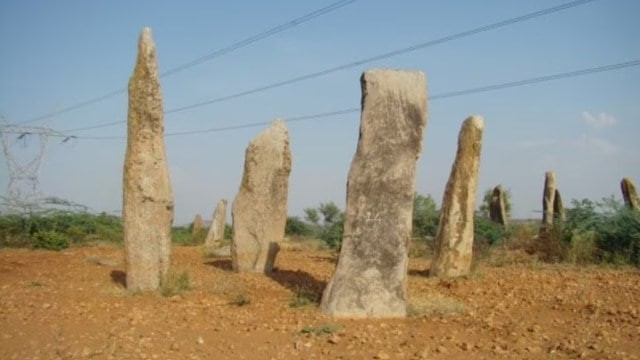
- 17 Mar 2025
In News:
The Mudumal Megalithic Menhirs of Narayanpet district, Telangana have been included in India’s UNESCO Tentative World Heritage Sites list in 2025, highlighting their archaeological, cultural, and astronomical significance. Telangana now has two tentative UNESCO heritage sites, the first being the Ramappa Temple (inscribed in 2021).
What are Menhirs and Megaliths?
- Menhirs are large, upright standing stones, often tapered at the top, used by prehistoric communities.
- They served ritual, memorial, or astronomical purposes and are found globally, with prominent examples in Europe such as Stonehenge (UK) and Carnac (France).
- Megaliths refer broadly to prehistoric stone structures, used for burials (like dolmens, cairns, cists) or as commemorative monuments (like menhirs).
- In India, megalithic culture thrived during the Iron Age (c. 1500 BCE–500 BCE), especially in the Deccan Plateau (Maharashtra, Karnataka, Tamil Nadu, Kerala, Andhra Pradesh, Telangana).
Significance of the MudumalMenhirs
- Age: Estimated to date back 3,500–4,000 years (1000 BCE–300 BCE).
- Site extent: Spread across 80 acres near the Krishna River, the site comprises:
- Around 80 large menhirs (10–14 feet tall).
- Nearly 3,000 alignment stones set in rows, believed to represent funerary rites and astronomical alignments.
- Astronomical importance: The alignments correspond with solar events such as solstices and equinoxes.
- A unique cup-marked stone represents the Ursa Major (Saptarshi) constellation—South Asia’s earliest known star depiction.
- Suggests advanced prehistoric knowledge of celestial navigation and calendar calculation.
Cultural and Living Traditions
- The site continues to hold spiritual value among locals.
- Menhirs are revered as "NilurallaThimmappa" (Thimmappa of the Standing Stones).
- One stone is worshipped as Goddess Yellamma, blending ancient heritage with living cultural practices.
Path Toward UNESCO World Heritage Status
- The MudumalMenhirs are among six sites added to India’s Tentative List in 2025, alongside:
- Kanger Valley National Park (Chhattisgarh)
- Ashokan Edict Sites (Multiple States)
- Chausath Yogini Temples (MP & Odisha)
- Gupta Temples (Multiple States)
- Palace-Fortresses of the Bundelas (MP & UP)
- India now has 62 sites on the Tentative List, a prerequisite for UNESCO nomination.
Subacute Sclerosing Panencephalitis (SSPE)
- 17 Mar 2025
In News:
Subacute Sclerosing Panencephalitis (SSPE) has emerged as a public health concern in Uttar Pradesh, particularly in Lucknow, due to poor measles vaccination coverage. Despite being rare globally, cases remain alarmingly high in regions with incomplete immunisation.
About SSPE:
- SSPE is a progressive and fatal neurological disorder that appears several years after a person has recovered from measles (rubeola).
- It is caused by a persistent measles virus in the brain, which triggers chronic inflammation and gradual destruction of nerve cells.
- Though globally rare, SSPE is more prevalent in areas with low immunisation rates. Males and children from low-income families are more commonly affected.
Symptoms:
- Early signs: cognitive decline, poor academic performance, behavioural changes (irritability, hallucinations), and sleep disturbances.
- Progression: seizures, involuntary muscle jerks, speech deterioration, visual impairment, and motor dysfunction.
- Advanced stage: muscle rigidity, difficulty swallowing, risk of aspiration pneumonia, coma, and eventual death.
Treatment & Prevention:
- No cure exists, and the mortality rate approaches 100%.
- Treatment focuses on symptom management; antiviral and immune-boosting drugs may slow progression.
- Timely measles vaccination is the only effective prevention strategy.
Significance for Public Health:
- SSPE underscores the critical importance of achieving universal immunisation coverage.
- Experts recommend stronger awareness campaigns and better enforcement of the Universal ImmunisationProgramme (UIP) to eliminate measles and prevent SSPE.
Maritime Security Belt 2025
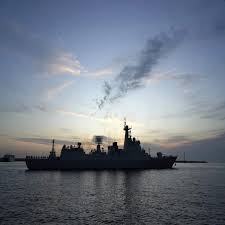
- 16 Mar 2025
In News:
Amid rising tensions over Iran’s expanding nuclear program and threats from Yemen's Houthi rebels, China, Iran, and Russia conducted the Maritime Security Belt 2025 naval exercise in the Gulf of Oman, strategically located near the Strait of Hormuz. This region is of global significance as it serves as a major maritime route, through which a fifth of the world’s crude oil is transported daily.
Key Highlights of the Exercise
- Location: Gulf of Oman, near the Strait of Hormuz, connecting the Persian Gulf to the open seas. This waterway is crucial for global energy supplies and trade.
- Participating Navies:
- Iran: State-run media highlighted the drills as a show of strength, particularly after Israeli strikes targeted Iran’s defense and missile programs.
- Russia: Participated with corvettes Rezky and Aldar Tsydenzhapov as well as the tanker Pechenega. Russia continues to rely on Iran for drone supplies, particularly in the ongoing war in Ukraine.
- China: Sent guided-missile destroyer Baotou and supply ship Gaoyouhu. China maintains deep ties with Iran, especially in the oil sector, despite facing Western sanctions.
- Operational Objectives:
- The exercise aimed to enhance coordination and operational synergy between the three nations, with a focus on maritime security, countering threats to shipping lanes, and addressing global security challenges.
- It featured live-fire drills, night operations, and complex naval maneuvers, ensuring the readiness of all three navies to respond to maritime threats.
- Regional Significance: The Gulf of Oman serves as the only maritime access for Iran to the open seas, making it critical for global trade. The Strait of Hormuz is particularly significant as it handles a significant portion of the world’s oil trade.
Strategic Context and Implications
- Nuclear Tensions: Iran's nuclear program, which has drawn concerns from both Israel and the U.S., remains a central issue in the region. The exercises coincide with the growing concerns over Iran’s stockpiling of uranium enriched to near weapons-grade levels, despite Tehran's assertions that its nuclear ambitions are peaceful.
- Impact of Drills: These joint naval exercises highlight the growing influence of China and Russia in the Middle East, both of which have strategic ties with Iran. While these countries do not patrol the wider Middle East region, their naval presence in the Gulf signals their deepening involvement in the region’s security dynamics, particularly in opposition to the U.S.-led presence.
- Yemen's Role: The Houthi rebels in Yemen have previously targeted international shipping in the Red Sea and Bab el-Mandeb Strait, and have threatened to resume attacks unless humanitarian aid is allowed into Gaza. The instability in the region further complicates security, as seen in the potential for maritime disruptions.
Geopolitical Dimensions
- China’s Interests: China, as a major consumer of Iranian crude oil, continues to engage with Iran despite facing Western sanctions. These drills serve as a symbol of China’s increasing military presence and its growing role in the Middle East, particularly in energy security.
- Russia’s Involvement: Russia's reliance on Iran for bomb-carrying drones in the Ukraine conflict further deepens the military relationship between the two nations. The maritime drills highlight Russia’s interest in securing its position in the Middle East amidst growing tensions with the West.
- U.S. Interests: The U.S., which monitors the region through its 5th Fleet based in Bahrain, remains cautious of the growing military cooperation between China, Russia, and Iran. The drills, especially the interference with GPS systems, have raised concerns about regional stability and the ability to ensure free navigation through critical maritime chokepoints.
Bongosagar 2025 Naval Exercise
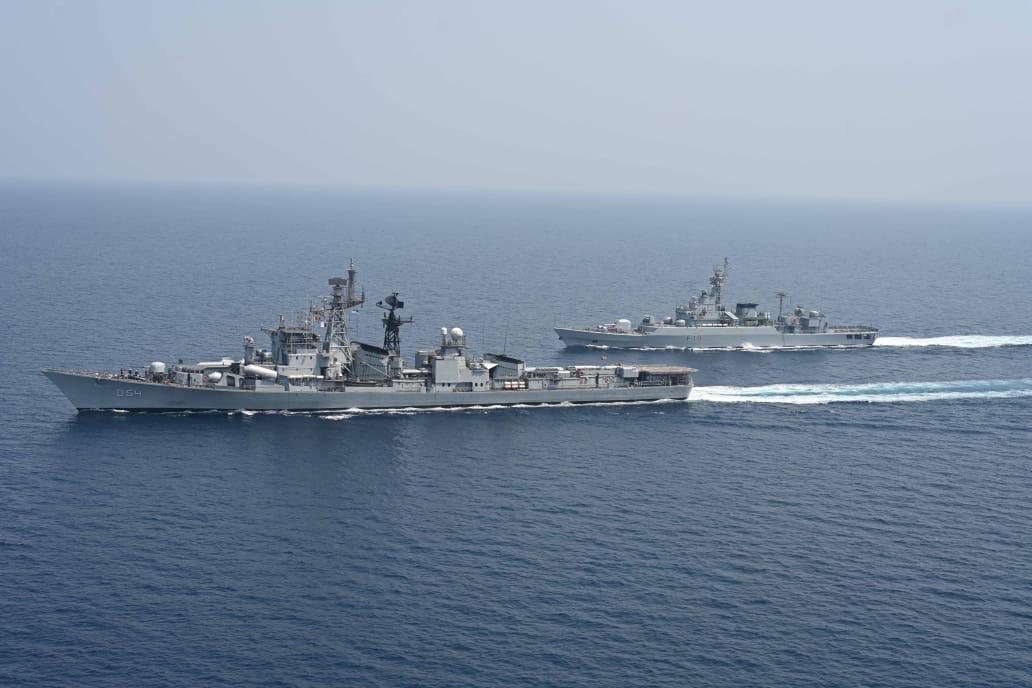
- 16 Mar 2025
In News:
India and Bangladesh conducted the Bongosagar 2025 naval exercise in the Bay of Bengal, aimed at enhancing maritime cooperation, operational interoperability, and regional security. This joint exercise aligns with India's maritime foreign policy doctrine — SAGAR (Security and Growth for All in the Region).
Key Highlights
- Participants:
- Indian Navy: INS Ranvir, a Rajput-class guided missile destroyer, commissioned in 1986.
- Bangladesh Navy: BNS Abu Ubaidah.
- Objectives:
- Strengthen tactical planning, information sharing, and coordinated response capabilities.
- Enhance interoperability for seamless maritime operations.
- Reinforce regional trust and cooperation under the SAGAR framework.
- Exercise Components:
- Surface firing drills
- Tactical manoeuvres
- Underway replenishment
- VBSS (Visit, Board, Search and Seizure) operations
- Cross-deck boarding exercises
- Communication drills
- Professional knowledge quizzes and steam past ceremonies
Strategic Significance
- Supports India’s SAGAR initiative (2015), promoting security and growth in the Indian Ocean region.
- Aligns with the broader MAHASAGAR (2025) vision — Mutual and Holistic Advancement for Security and Growth Across Regions — targeting deeper engagement with the Global South.
- Enhances the ability of both navies to counter maritime threats, uphold freedom of navigation, and ensure regional maritime stability.
India-Bangladesh Defence Cooperation
- Army-level: Exercise Sampriti
- Navy-level: Exercises Bongosagar and Coordinated Patrol (CORPAT)
India’s Carbon Credit Trading Scheme (CCTS)
- 16 Mar 2025
In News:
To meet its climate commitments under the Paris Agreement, India is moving towards a market-based mechanism for emissions reduction through the Carbon Credit Trading Scheme (CCTS), 2023. The scheme was made possible by amending the Energy Conservation Act, 2021 and replaces the Perform, Achieve, and Trade (PAT) scheme operational since 2012.
What is the Carbon Credit Trading Scheme (CCTS)?
- CCTS is India’s version of an emissions trading system (ETS) designed to reduce greenhouse gas (GHG) emissions intensity — emissions per unit of output — rather than absolute emissions.
- It introduces Carbon Credit Certificates (CCC), each representing one tonne of CO? equivalent (tCO?e) reduction.
- Managed by the Bureau of Energy Efficiency (BEE) and coordinated by a National Steering Committee, the scheme involves various regulatory bodies including electricity exchanges, MoEFCC, and the Central Electricity Regulatory Commission.
Key Features of the CCTS
Aspect Description
Transition from PAT - Shifts focus from energy efficiency (PAT) to emission intensity (CCTS).
Coverage - Initially targets energy-intensive sectors: Iron & Steel, Cement, Aluminium,
Fertilisers, Refineries, Pulp & Paper, and Textiles (~16% of national
GHG emissions). Power sector (~40%) may be included later.
Dual Mechanisms - 1. Compliance: Mandates targets for large emitters. 2. Offset:
Voluntary participants earn credits by reducing emissions.
Implementation Timeline - Expected to launch fully by mid-2026, in a phased manner.
Global Context of Carbon Pricing
- As of June 2024, 89 countries operate carbon pricing mechanisms, covering 12.8 Gt CO?e (25% of global emissions).
- Carbon pricing methods:
- ETS (Cap-and-Trade / Baseline-and-Credit): Companies trade allowances or credits based on performance.
- Carbon Tax: Fixed price on emissions; provides cost certainty but not emissions certainty.
- Crediting Mechanism: Projects generating verified emission reductions earn tradable carbon credits.
Challenges in Implementing CCTS
- Target Setting: Overly lenient targets may cause credit oversupply, reducing prices; overly strict ones risk high compliance costs.
- Compliance Gaps: Under PAT, over half the required energy certificates were never purchased, with no penalties imposed.
- Delays: Credit issuance under PAT (Phase IV onwards) has been delayed since 2021, affecting market confidence.
- Transparency: Lack of public access to data on actual performance undermines accountability.
- Monitoring and Verification (MRV): Requires robust systems to prevent double counting and ensure credible reporting.
Steps to Strengthen India’s Carbon Market
- Align with global practices: Learn from the EU ETS — implement strict monitoring, gradual tightening of caps, and price stability mechanisms.
- Robust MRV Framework: Ensure accuracy in emission data to boost trust.
- Digital Trading Platform: Track and authenticate credit transactions; avoid fraud.
- Industry Incentives: Encourage early compliance via tax benefits and access to green finance.
- Trade Compatibility: Prepare for global measures like the EU’s Carbon Border Adjustment Mechanism (CBAM) by ensuring transparency and comparability.
India’s CCTS represents a significant shift in climate governance by institutionalizing carbon pricing. While it brings India in line with evolving global practices, the success of the Indian carbon market will depend on credible enforcement, transparent functioning, and strong regulatory architecture. If implemented effectively, it can drive low-carbon growth and support India’s target of reducing emissions intensity by 45% by 2030.
India's Foreign Exchange Reserves witness sharpest rise in two years

- 16 Mar 2025
In News:
In a notable economic development, India’s foreign exchange (forex) reserves rose sharply by $15.267 billion to reach $653.966 billion during the week ending March 7, 2025. This marks the largest weekly increase in over two years, as per data released by the Reserve Bank of India (RBI).
Key Reason for the Surge
- The jump is attributed primarily to a $10 billion forex swap conducted by the RBI on February 28, 2025, where the central bank purchased US dollars in exchange for rupees.
- The objective was to inject liquidity into the domestic financial system while strengthening forex reserves.
Component-wise Breakdown
- Foreign Currency Assets (FCA): Increased by $13.993 billion to $557.282 billion.
(FCAs are held in major currencies like USD, Euro, Pound, Yen and are affected by their exchange rate fluctuations.) - Gold Reserves: Decreased by $1.053 billion to $74.325 billion.
- Special Drawing Rights (SDRs): Rose by $212 million to $18.21 billion.
- Reserve Tranche Position (RTP) with IMF: Declined by $69 million to $4.148 billion.
Understanding Forex Reserves
- Foreign Exchange Reserves are external assets held by a country's central bank, used to support its monetary and exchange rate policies.
- These reserves include:
- Foreign Currency Assets (FCA)
- Gold
- SDRs (with the International Monetary Fund)
- RTP (Reserve capital with the IMF)
Purpose and Importance
- Ensure external stability and maintain confidence in the currency.
- Help manage the exchange rate and balance of payments (BoP).
- Act as a buffer against external shocks, such as volatile capital flows or currency crises.
- Strengthen India’s international creditworthiness.
Global Context
- RBI is the custodian of India’s forex reserves.
- China holds the largest forex reserves globally.
India’s First CAR T-Cell Therapy
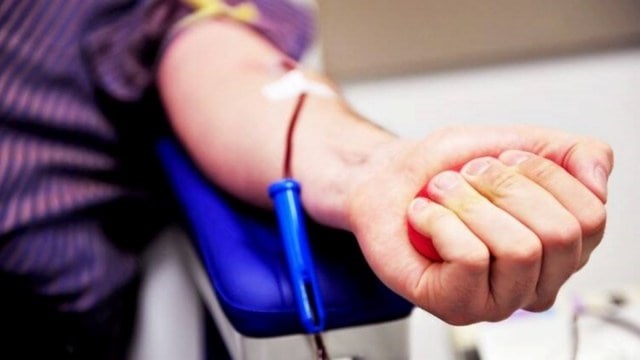
- 16 Mar 2025
In News:
India has achieved a significant milestone in cancer treatment with the successful clinical trials of its first CAR T-cell therapy, marking a crucial step in indigenous biomedical innovation. The findings were recently published in The Lancet, making it the first CAR T-cell clinical trial from India to appear in an international journal.
What is CAR T-Cell Therapy?
- CAR T-cell therapy (Chimeric Antigen Receptor T-cell therapy) is a form of immunotherapy where a patient’s own T-cells are genetically modified to identify and destroy cancer cells.
- Primarily used for blood cancers, especially those unresponsive to first-line treatments, such as:
- Acute Lymphoblastic Leukemia (ALL)
- Large B-cell Lymphoma
Indian Breakthrough
- Developed by ImmunoAct, a start-up incubated at IIT Bombay.
- 73% response rate recorded in Phase I and II clinical trials.
- Approved by India’s drug regulator in 2023, bypassing Phase III trials under conditional approval due to the urgent need and novelty.
- Therapy is now available in major hospitals like Apollo, Fortis, Max, and Amrita.
Key Findings (Lancet Report)
- Median progression-free survival:
- 6 months for ALL patients
- 4 months for lymphoma patients
- Therapy costs approx. ?25 lakh, about 1/20th of global CAR T-cell therapy prices (?8–10 crore abroad).
Side Effects
- Severe immune reaction (Haemophagocyticlymphohistiocytosis) in 12% patients, leading to at least one death.
- Other adverse effects:
- Neutropenia (96%) – Low white blood cells
- Thrombocytopenia (65%) – Low platelet count
- Anemia (61%) – Low red blood cell count
- Febrile neutropenia (47%) – Infection risk due to low immunity
Significance
- Makes advanced cancer care more accessible and affordable within India.
- Positions India among a select group of countries with indigenous CAR T-cell therapy capabilities.
- Marks progress towards self-reliance in high-end medical technologies.
Pobitora Wildlife Sanctuary
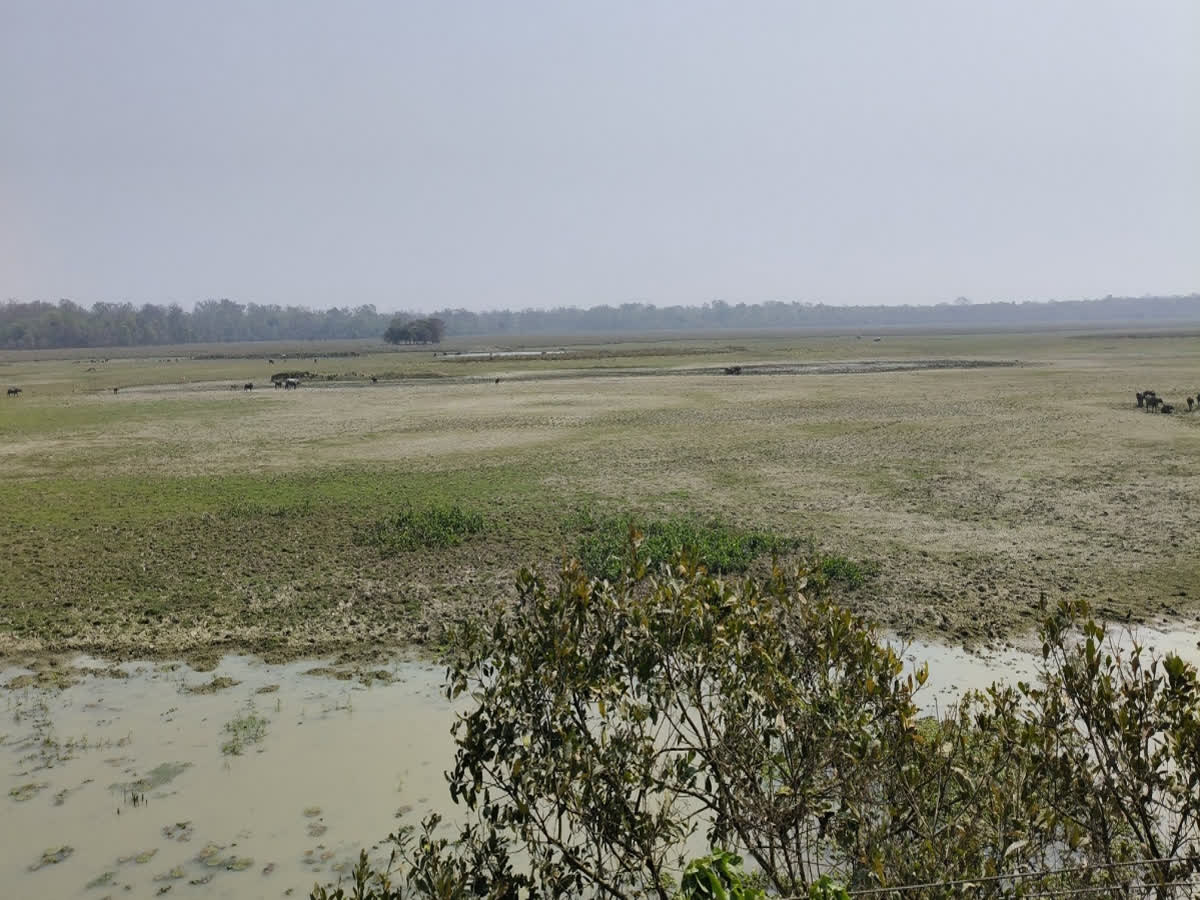
- 15 Mar 2025
In News:
Pobitora Wildlife Sanctuary, located in Assam, is renowned for its high density of the Great Indian One-Horned Rhinoceros and diverse biodiversity. The sanctuary, covering 38.85 km², is facing a growing concern as one of its major wetlands, TamulidobaBeel, is drying up. This situation underscores the urgent need for habitat management to protect the sanctuary's wildlife.
About Pobitora Wildlife Sanctuary:
- Location: Located within 30 km of Guwahati, Assam, it was established in 1998 and spans 48.81 km².
- Fauna: Famous for its rhino population, the sanctuary also houses leopards, wild boars, barking deer, wild buffaloes, and over 2,000 migratory birds.
- Flora: The sanctuary is dominated by wet savannah and marshland, though the invasive water hyacinth is a significant problem, especially for waterfowl.
TamulidobaBeel: A Crucial Wetland
- Role: A key water body within the sanctuary, TamulidobaBeel is vital for rhinos, water buffaloes, and migratory birds.
- Drying Concern: Experts and locals have observed the early drying up of the Beel, a trend that has worsened over the past few years. Migratory birds have already abandoned the wetland earlier than expected, signaling a broader ecological imbalance.
Factors Contributing to Drying of the Wetland:
- Siltation: The deposition of silt has significantly reduced water retention in the Beel.
- Climate Change: Predictions of a hotter weather season (March-May 2025) by the India Meteorological Department suggest further strain on the sanctuary's water resources, affecting biodiversity.
Ecological Implications:
- Rhino Habitat Impact: About 20-25 rhinos are regularly found near TamulidobaBeel. The drying of this wetland increases water scarcity in their core habitat, risking human-animal conflicts as rhinos may stray outside the sanctuary.
- Bird Migration: The Beel also serves as a migratory bird hub, particularly in winter. Early drying may disrupt migration patterns, affecting bird populations.
Government Response and Measures:
- Desilting Efforts: The Forest Department has taken proactive measures, including desilting the Beel to restore water levels and maintain its ecological functions.
- Expert Consultations: Collaborations with institutions like IIT Guwahati are underway to assess and manage the wetland restoration scientifically.
- Long-term Plans: Restoration efforts are focused on improving water retention and managing silt deposition, alongside broader habitat management initiatives.
Expert Recommendations:
- Experts emphasized the critical need for scientific habitat management and stressed the importance of restoring wetlands to ensure the sanctuary's long-term ecological balance.
- The government must focus on sustainable habitat conservation and water management strategies to protect species, especially the rhinos.
PM-YUVA 3.0: Mentoring Young Authors Scheme (2025)
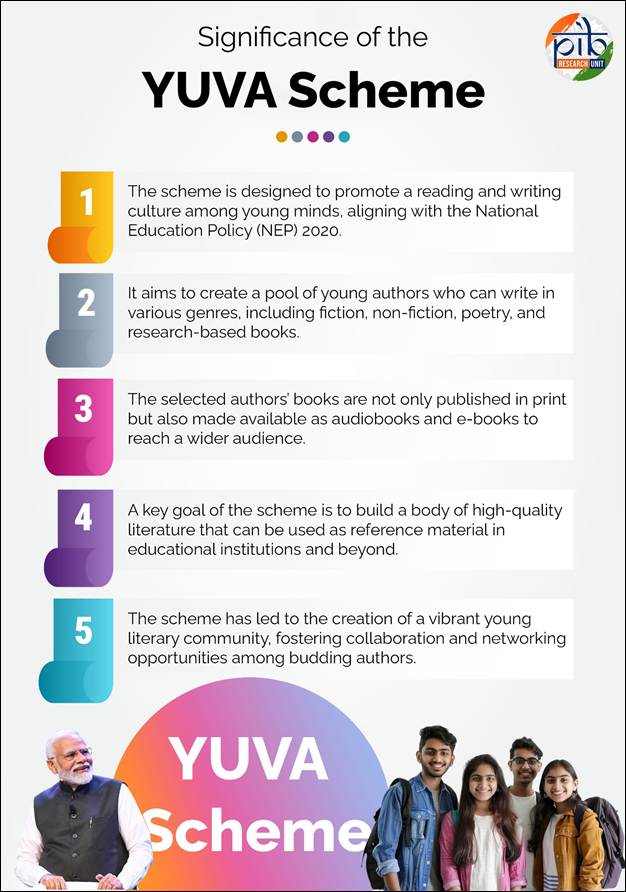
- 15 Mar 2025
In News:
Recently, the Ministry of Education, Department of Higher Education, launched the third edition of the Prime Minister’s Scheme for Mentoring Young Authors (PM-YUVA 3.0). The scheme is a part of India’s broader efforts to cultivate literary talent among youth and promote a vibrant reading and writing culture.
About PM-YUVA Scheme:
- Launched by: Ministry of Education, Government of India
- Implementing Agency: National Book Trust (NBT), India
- Target Group: Young authors below 30 years of age
- Launch Date: March 11, 2025
- Application Window: March 11 to April 10, 2025, via MyGov portal
- Number of Authors Selected: 50
- Eligibility: Applicants of PM-YUVA 1.0 and 2.0 are not eligible
Objectives:
- To mentor young writers and encourage storytelling in Indian languages and English
- To promote a book culture, literacy, and intellectual engagement among youth
- To reflect Indian heritage, knowledge systems, and contemporary progress through literature
Themes for PM-YUVA 3.0:
- Contribution of Indian Diaspora in Nation Building
- Indian Knowledge System (IKS)
- Makers of Modern India (1950–2025)
Mentorship and Publishing:
- Selected authors will undergo training from June 30 to December 30, 2025, under the guidance of eminent mentors
- Books authored during the programme will be published by NBT and translated into Indian languages to promote Ek Bharat Shreshtha Bharat
- Authors will participate in literary festivals and gain exposure to the publishing world
Financial Support and Recognition:
- Scholarship: ?50,000 per month for 6 months (Total ?3 lakh per author)
- Royalty: 10% on successful publication of books
- Platform: Authors will receive national-level exposure for promoting their books and themes
Background:
- PM-YUVA 1.0 (2021): Focused on India’s freedom struggle and unsung heroes
- PM-YUVA 2.0 (2022): Highlighted democracy and constitutional values
- PM-YUVA 3.0 (2025): Explores diaspora, knowledge systems, and nation-building post-independence
Significanc:
- Aligns with NEP 2020 goals of holistic development and youth empowerment
- Encourages intellectual and cultural contributions by the youth
- Promotes awareness of India’s diaspora and indigenous knowledge systems
Raisina Dialogue 2025
- 15 Mar 2025
In News:
The 10th edition of the Raisina Dialogue, India’s premier conference on geopolitics and geo-economics, is scheduled to be held in New Delhi from March 17–19, 2025.
About Raisina Dialogue:
- Launched: 2016
- Organisers: Observer Research Foundation (ORF) in collaboration with the Ministry of External Affairs, Government of India
- Format: Multi-stakeholder, cross-sectoral conference bringing together global leaders in politics, business, media, academia, and civil society
- Modelled On: Munich Security Conference (Germany) and Shangri-La Dialogue (Singapore)
- Annual Venue: New Delhi
- 2025 Theme: Kalachakra: People. Peace. Planet.
Significance for India and the World:
- Provides a platform for dialogue on global strategic and security issues
- Enhances India’s image as a thought leader in international diplomacy
- Fosters multilateral cooperation on contemporary global challenges such as conflict resolution, climate change, technological disruption, and global governance
- Reflects India’s growing role as a bridge between the Global North and Global South
World Air Quality Report 2024
- 15 Mar 2025
In News:
India remains among the world’s most polluted countries despite slight improvements in air quality.
Published by: IQAir (Swiss Air Quality Technology Firm)
Key Findings:
- India’s Global Rank: 5th most polluted country in 2024 (improved from 3rd in 2023).
- Average PM2.5 Level (India): 50.6 µg/m³ in 2024 — 10 times higher than the WHO guideline of 5 µg/m³.
- Top Polluted Cities:
- Byrnihat (Assam-Meghalaya border) — most polluted city globally with PM2.5 at 128.2 µg/m³.
- Delhi — most polluted capital city globally with PM2.5 at 91.6 µg/m³.
- 13 of the world’s 20 most polluted cities are in India, including Mullanpur, Faridabad, Gurugram, Bhiwadi, Noida, and Ganganagar.
- Northern India: Faces severe pollution due to crop stubble burning (contributes ~60% of PM2.5 levels).
- Global Air Quality: 91% of countries exceeded WHO PM2.5 safe limits; only 12 countries met the recommended levels.
Major Sources of PM2.5 Pollution:
- Vehicular emissions
- Industrial discharges
- Biomass burning (e.g., firewood, crop residue)
Health & Environmental Impact:
- Health: Linked to respiratory and cardiovascular diseases, cancers; reduces life expectancy by ~5.2 years in India.
- Annual Death Toll: ~1.5 million deaths in India linked to PM2.5 exposure (2009–2019, Lancet Study).
- WHO: 99% of the world’s population breathes polluted air.
India’s Measures to Combat Air Pollution:
Initiative Description
NCAP (2019) - Aims to reduce PM levels by 20–30% in non-attainment cities by
2026. Focuses on monitoring, emissions control, public awareness.
BS-VI Emission Standards - Implemented in 2020 for vehicles to reduce vehicular pollution.
FAME Scheme - Promotes electric and hybrid vehicles to cut down transport-related emissions.
PM Ujjwala Yojana - Provides LPG connections to reduce indoor air pollution from biomass.
GRIHA - Encourages eco-friendly construction practices.
GRAP - Emergency action plan in Delhi-NCR during high pollution episodes.
Commission for Air Quality Management - Coordinates air quality actions across NCR and
nearby areas.
Public Transport & Regulation - Expanding metro/bus networks, penalising high-emission vehicles.
Way Forward:
- Strengthen enforcement of emission norms for vehicles and industries.
- Promote LPG usage over biomass for cooking, especially among rural poor.
- Increase public transport options and incentivise clean technologies.
- Raise awareness and improve inter-state coordination on stubble burning.
Uniyalakeralensis
- 15 Mar 2025
In News:
Researchers have confirmed the discovery of a new flowering plant species named Uniyalakeralensis (family: Asteraceae) in the Agasthyamala Biosphere Reserve (ABR), located in the southern Western Ghats of Kerala. Endemic to southwest India, the species is named in honour of the state of Kerala.
Key Features:
- Plant Type: Dense shrub with light purple flowers, growing 1–3 metres tall.
- Distinctive Traits: Larger leaves, longer petioles (leaf stalks), and fewer lateral veins compared to related species like U. comorinensis and U. salviifolia.
- Flowering & Fruiting Period: August to April.
- Habitat: Open areas on western mountain slopes of ABR, at elevations between 700–1,400 metres.
- Distribution: Around 5,000 individuals across four subpopulations, covering an estimated area of 250 km².
- IUCN Status (2024): Data Deficient (DD) due to limited information on long-term population trends.
The plant was first collected in 1998 and initially misidentified as Vernonia multibracteata. Later taxonomic revisions led to the recognition of Uniyala as a separate genus, named after botanist B.P. Uniyal, with this species formally described as new.
About Agasthyamala Biosphere Reserve (ABR):
- Location: Spans parts of Kerala and Tamil Nadu in the southern Western Ghats.
- UNESCO Status: Recognized under the Man and the Biosphere (MAB) Programme in 2016.
- Biodiversity Highlights: Home to over 2,254 higher plant species, including 405 endemics; key fauna includesNilgiriTahr, Lion-tailed Macaque, Bengal Tiger, and Indian Elephant.
- Indigenous Communities: Inhabited by the Kani tribes in both states.
NECTAR to Lead Agri-Tech Revolution
- 14 Mar 2025
In News:
In a major policy and scientific initiative, the Government of India is transforming the Northeast into the country’s next saffron cultivation hub, following the successful model of Jammu & Kashmir’s Pampore. The development is being led by the North East Centre for Technology Application and Reach (NECTAR), an autonomous body under the Department of Science and Technology (DST).
Mission Saffron and the Saffron Bowl Project
Originally launched in 2010–11 for Jammu and Kashmir, Mission Saffron was expanded to the Northeast in 2021 through the Saffron Bowl Project. The initiative now promotes saffron cultivation in Sikkim, Arunachal Pradesh, and Meghalaya, with further expansion planned for Nagaland and Manipur.
Saffron, derived from the stigmas of Crocus sativus, requires high-altitude (approx. 2000m), well-drained loamy or calcareous soils, and a dry to temperate climate. These agro-climatic conditions are present in parts of the Northeast, making it a viable region for saffron farming.
NECTAR’s Role in Agri-Tech and Regional Development
Established in 2014, NECTAR is driving technology-based interventions in agriculture, infrastructure, and economic development across the Northeastern states. The foundation stone for its permanent campus in Shillong was laid in March 2025 by Union Minister Dr. Jitendra Singh, marking a significant boost for scientific infrastructure in the region.
NECTAR's notable initiatives include:
- Saffron cultivation under the Saffron Bowl Project.
- Use of drone technology for land mapping under the Swamitva Yojana.
- Promotion of bamboo-based industries and honey production.
- Supporting indigenous technologies for sustainable rural development.
The Shillong campus is envisioned as a Centre of Excellence for advanced technological demonstrations and skill development, helping bridge last-mile gaps in technology adoption.
Significance for India’s Development
The Northeast is integral to India's aim of becoming a developed nation by 2047. Improvements in connectivity—roads, railways, and air links—have laid the groundwork for economic and scientific transformation in the region. The government sees the Northeast as a key growth frontier to unlock the country’s untapped potential.
Supersolid Light
- 14 Mar 2025
In News:
In a groundbreaking achievement, Italian scientists have successfully created the world’s first ‘supersolid’ made from light, marking a new milestone in quantum physics. This discovery demonstrates that light, traditionally understood as pure energy, can be manipulated into a rare state of matter that combines the order of a solid with the frictionless flow of a superfluid.
What Is a Supersolid?
A supersolid is an exotic quantum phase of matter exhibiting dual characteristics:
- Solid-like structure: Maintains a periodic, lattice-like spatial arrangement.
- Liquid-like behavior: Flows without internal resistance (zero viscosity), like a superfluid.
Previously, supersolidity was observed in Bose-Einstein condensates (BECs)—ultracold atomic systems cooled near absolute zero (–273.15°C), where quantum effects dominate.
How was Supersolid Light created?
Researchers used semiconductor nanostructures (gallium arsenide with micro-ridges) to create polaritons—hybrid quasiparticles formed by coupling photons (light) with excitons (matter).
- When cooled and stimulated with a laser, these polaritons condensed into a coherent quantum fluid arranged in a regular pattern, exhibiting both superfluid and solid-like properties.
Key Features of Supersolid Light:
- Quantum Coherence: Particles move in a synchronized, wave-like manner due to shared quantum states.
- Frictionless Flow: Can move through obstacles without energy loss.
- Crystalline Order: Particles maintain a rigid spatial configuration.
- Symmetry Breaking: Demonstrates both spatial order and dynamic fluidity.
Significance and Applications:
- Quantum Computing: Enhances qubit stability and coherence, essential for error-free quantum operations.
- Photonics and Optical Devices: Enables development of light-based circuits with high efficiency.
- Energy Technologies: Potential applications in superconductors and frictionless systems.
- Fundamental Research: Offers insights into non-equilibrium quantum systems and phase transitions.
Why it matters for Science & Technology?
This marks the first time light has been shown to form a supersolid, expanding the boundaries of material science. It provides a new experimental platform for studying quantum behavior in light-matter systems, bridging the gap between theoretical physics and practical innovation.
PM-ABHIM
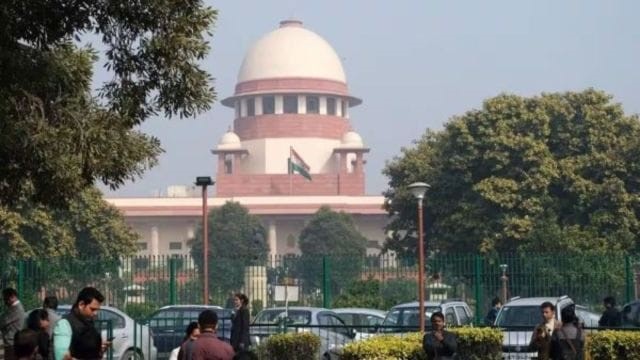
- 14 Mar 2025
In News:
The Pradhan Mantri Ayushman Bharat Health Infrastructure Mission (PM-ABHIM) is a major Centrally Sponsored Scheme launched in 2021 to strengthen public health systems across India, with a focus on pandemic preparedness and infrastructure development at all levels of healthcare.
In March 2025, the Delhi government agreed to sign a Memorandum of Understanding (MoU) with the Ministry of Health and Family Welfare to implement PM-ABHIM, marking a policy shift after earlier resistance. Under the agreement:
- 553 existing Mohalla Clinics will be upgraded to Urban Ayushman Arogya Mandirs (U-AAMs).
- 413 new U-AAMs will be established.
- A total of 1,139 Urban AAMs will cater to Delhi’s primary healthcare needs.
Key Features of PM-ABHIM (2021–26):
- Total outlay: ?64,180 crore.
- Goal: Strengthen health infrastructure for effective response to future pandemics and disasters, and improve public health systems at primary, secondary, and tertiary levels.
- Scope: Combines Central Sector and Centrally Sponsored Scheme (CSS) components.
Major Components:
- 17,788 Sub-Centres asAyushman Arogya Mandirs (AAMs)in rural areas.
- 11,024 Urban AAMs, focusing onslum areas.
- 3,382 Block Public Health Units (BPHUs).
- 730 Integrated Public Health Labs (IPHLs)—one per district.
- 602 Critical Care Hospital Blocks (CCBs)in districts with populations above 5 lakh.
Governance & Implementation:
- Health being a State subject, implementation is carried out by State/UT governments.
- The MoHFW provides technical and financial assistance.
- Awareness and IEC (Information, Education, Communication) activities are integrated with other National Health Mission programs.
Nagorno-Karabakh Conflict
- 14 Mar 2025
In News:
In a landmark development, Armenia and Azerbaijan have finalized a peace agreement in 2024, aiming to end decades of hostilities over the Nagorno-Karabakh region—a flashpoint in the South Caucasus with deep-rooted ethnic and geopolitical tensions.
About Nagorno-Karabakh:
- A landlocked, mountainous region in the South Caucasus, referred to as Artsakh by Armenians.
- Located within internationally recognized Azerbaijani territory, but historically inhabited by ethnic Armenians.
- Features diverse geography: steppe lowlands, dense forests, and alpine meadows.
Historical Background:
- Soviet Era (1920s): USSR established Nagorno-Karabakh as an autonomous region within Muslim-majority Azerbaijan, despite its Armenian Christian majority.
- Post-USSR Collapse (1991): Karabakh declared independence; First Nagorno-Karabakh War (1988–1994) broke out.
- Result: Armenian forces took control of Nagorno-Karabakh and surrounding Azerbaijani districts.
- 2017: A referendum in Karabakh changed the government to a fully presidential system and renamed the region from Nagorno-Karabakh Republic to Republic of Artsakh.
- Second War (2020): Azerbaijan regained significant territory; thousands of soldiers were killed on both sides.
- 2023 Azerbaijani Offensive: In a swift one-day operation, Azerbaijan reasserted full control over the region.
- The Republic of Artsakh (unrecognized government) was officially dissolved in 2024.
- Over 1 lakh ethnic Armenians fled to Armenia.
India’s Position:
- India maintains a neutral stance, supports a peaceful diplomatic resolution under the aegis of the OSCE Minsk Group.
- Both Armenia and Azerbaijan are part of the International North-South Transport Corridor (INSTC), critical for India’s strategic connectivity and trade with Central Asia and Russia.
Mission Amrit Sarovar
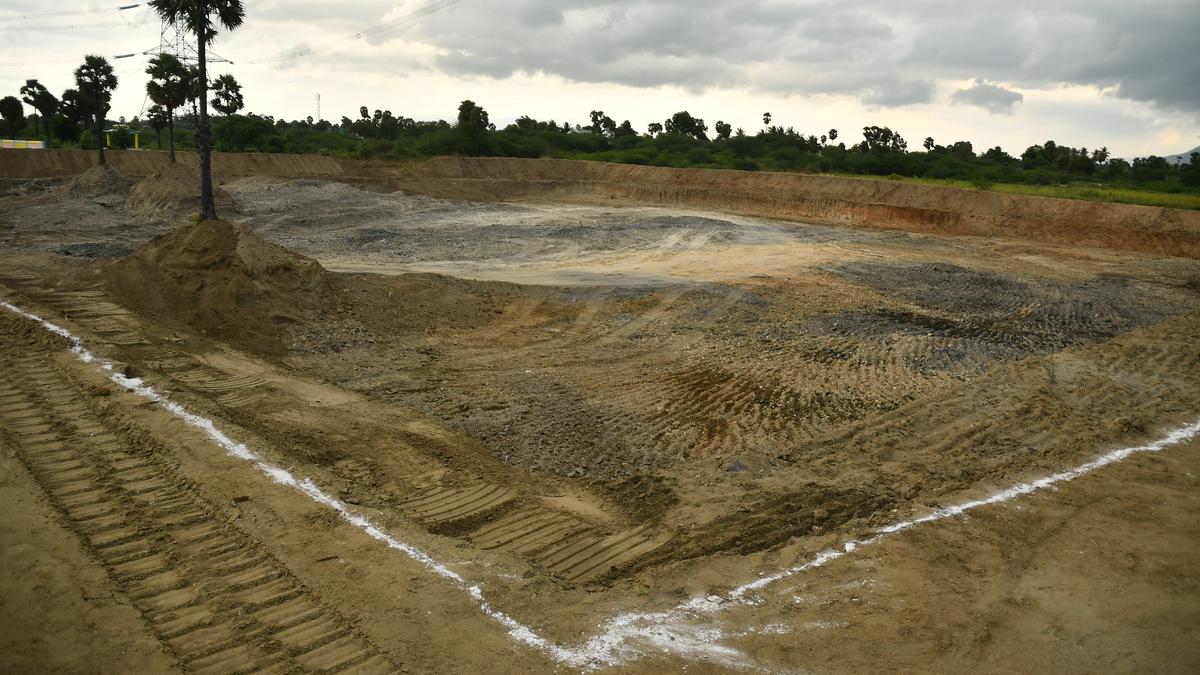
- 14 Mar 2025
In News:
Launched in April 2022, Mission Amrit Sarovar is a Government of India initiative aimed at addressing water scarcity, particularly in rural areas, by constructing or rejuvenating 75 water bodies in every district, targeting over 50,000 ponds nationwide. As of October 2024, over 68,000 ponds have been completed.
Key Features:
- Minimum Pond Size: 1 acre with a water holding capacity of ~10,000 cubic metres.
- Community Participation: Sites approved by special Gram Sabha, with a Panchayat Pratinidhi supervising development.
- Multi-Ministerial Collaboration: Involves the Ministries of Rural Development, Jal Shakti, Panchayati Raj, Culture, Environment, and others.
- Technical Support: BISAG-N (Bhaskaracharya National Institute for Space Applications and Geo-informatics) is the technical partner, offering a dedicated portal and mobile app for tracking progress.
- Whole-of-Government Approach: Ensures coordinated implementation across ministries.
Railways' Involvement (2025 Initiative):
- Under Phase II of the mission, Indian Railways is tasked with:
- Desilting existing water bodies or constructing new ponds near railway tracks.
- Using excavated soil for railway embankments, where suitable.
- Coordinating with district authorities and the Ministry of Rural Development to identify appropriate sites.
- The goal is to complete a significant number of ponds by August 15, 2025.
- Promotes climate resilience, ecological balance, and sustainable water resource management.
Ponzi Schemes in India
- 13 Mar 2025
In News:
Probe agency seizes Business Jet at Hyderabad Airport in "Ponzi Scam" Case.
What is a Ponzi Scheme?
A Ponzi scheme is a fraudulent investment operation where returns to earlier investors are paid using the capital of new investors, not from legitimate business profits. It creates an illusion of high returns with low or no risk.
- Origin: Named after Charles Ponzi, who orchestrated such a scam in the USA in 1920.
- Mechanism:
- Relies on a continuous influx of new investors.
- Uses word-of-mouth, high-return promises, and deceptive marketing.
- Collapses when new investments stop, leading to default on payouts.
Ponzi vs Pyramid Scheme
- Ponzi Scheme: Pays earlier investors from newer investors' money, without involving them in recruitment.
- Pyramid Scheme: Rewards early participants for recruiting others, creating a hierarchical structure that collapses as recruitment slows.
Recent Developments
- ED Action (2024): The Enforcement Directorate (ED) seized a business jet at Hyderabad airport in connection with a ?850 crore Ponzi scam involving a Hyderabad-based company.
- Odisha Case: The STA Crypto scheme operated as a Ponzi-cum-multi-level marketing (MLM) scam, luring people with promises of crypto earnings in return for recruiting more members.
Legal Safeguards Against Ponzi Schemes in India
- Prize Chits and Money Circulation (Banning) Act, 1978
- Bans prize chits and money circulation schemes.
- Enforced by State Governments.
- Banning of Unregulated Deposit Schemes Act, 2019
- Specifically prohibits unregulated deposit-taking schemes including Ponzi models.
- Provides a unified framework to protect depositors.
- Prevention of Money Laundering Act (PMLA), 2002: Used by ED to trace and seize proceeds of crime from Ponzi operators.
Red Flags of Ponzi Schemes
- Unusually high and consistent returns
- No clear investment strategy or revenue model
- Over-emphasis on recruitment
- Difficulty in withdrawing funds
- Lack of regulatory approval or transparency
Consequences of Participation
- Investors: Risk of complete loss of capital.
- Promoters: Face legal action, asset seizure, and imprisonment.
- General Public: Erosion of trust in financial systems.
Preventive Measures for Individuals
- Verify if the scheme is registered with SEBI, RBI, or other regulators.
- Be cautious of too-good-to-be-true returns.
- Conduct due diligence and consult financial advisors.
- Report suspicious schemes to authorities like SEBI or EOW.
Madhav National Park
- 13 Mar 2025
In News:
Madhav National Park in Madhya Pradesh has been declared India’s 58th Tiger Reserve and the 9th in Madhya Pradesh, strengthening the state's status as a leader in tiger conservation.
About Madhav National Park
- Location: Shivpuri district, Madhya Pradesh; part of the Chambal region and the Upper Vindhyan Hills on the northern fringe of the Central Highlands.
- Established: As Madhya Bharat National Park in 1955; renamed Madhav National Park in 1959.
- National Park Status: Since 1958.
- Area: Approx. 354 sq km (expanded from 165 sq km).
- Historical Significance: Former hunting ground of Mughal emperors and Maharaja of Gwalior; named after Maharaja Madhav Rao Scindia.
Ecological Profile
- Vegetation:
- Northern Tropical Dry Deciduous Forests
- Dry Thorn Forests typical of North-Western Madhya Pradesh
- Fauna:
- Large Mammals: Tigers, leopards, wolves, jackals, foxes, wild dogs
- Antelopes: Nilgai, Chinkara, Chowsinga
- Deer Species: Chital, Sambar, Barking Deer
- Others: Crocodiles, porcupines, wild pigs, pythons
- Aquatic Ecosystems:
- Two major lakes: Sakhya Sagar and Madhav Sagar support aquatic biodiversity
Tiger Conservation Highlights
- Declared a Tiger Reserve: In 2024, becoming India’s 58th and Madhya Pradesh’s 9th.
- Tiger Reintroduction: Began in 2023; currently home to five tigers, including two cubs.
- Core and Buffer Zones:
- Core Zone: Strictly protected, no human activity
- Buffer Zone: Allows limited, regulated human use to support coexistence
Governance and Protection Framework
- Tiger Reserve Status:
- Notified under Section 38V of the Wildlife Protection Act, 1972
- Falls under Project Tiger (1973), monitored by the National Tiger Conservation Authority (NTCA)
- Approval Process:
- State Government Proposal
- NTCA Evaluation
- MoEFCC Final Notification
- Monitoring System: M-STrIPES (Monitoring System for Tigers – Intensive Protection and Ecological Status) used for surveillance and conservation.
Brahmastra Hypersonic Missile
- 13 Mar 2025
In News:
Indian scientists, under the Defence Research and Development Organisation (DRDO), have successfully developed and tested a hypersonic missile named Brahmastra, officially called the Long Range Anti-Ship Missile (LRAShM). It represents a major milestone in indigenous defence technology.
Key Features of Brahmastra (LRAShM)
- Type: Hypersonic glide missile
- Developer: DRDO
- Speed: Mach 10 (≈12,144 km/h) — 10 times the speed of sound
- Range: 1,500 km
- Flight Time to Target: Can destroy enemy warships within 7–8 minutes of launch
- Launch Platforms: Compatible with both land and naval platforms
- Technology:
- Scramjet propulsion and glide vehicle technology
- Advanced heat-resistant materials to withstand extreme thermal conditions
- Radar evasion and trajectory maneuverability, making interception extremely difficult
Strategic Significance
- Naval Superiority: Enhances India’s maritime strike capabilities, especially in the Indian Ocean Region (IOR).
- Counter to China: Outperforms China’s DF-17 missile, which has a shorter range (1,000 km).
- Quick Response: For instance, a warship near Pakistan’s Karachi port could be neutralized within 4–5 minutes from India’s western coastline.
- Technological Benchmark: Establishes India’s lead in scramjet and hypersonic glide vehicle technology.
Comparative Edge Over Global Counterparts
- China's DF-17: Also hypersonic (Mach 10) but limited to a 1,000 km range.
- U.S. Programs: Still under testing; India’s successful deployment marks it as a front-runner in this emerging domain.
- Strategic Camouflage: Experts speculate India may have publicly understated the missile's actual capabilities for security reasons.
U.S. Strategic Bitcoin Reserve

- 13 Mar 2025
In News:
In March 2025, U.S. President Donald Trump signed an executive order establishing a Strategic Bitcoin Reserve, positioning the United States as a frontrunner in digital asset storage and long-term crypto strategy.
What is the Strategic Bitcoin Reserve?
- A government-backed stockpile of Bitcoin and select other cryptocurrencies, managed by the U.S. Department of Treasury and Department of Commerce.
- Intended to serve as a digital financial reserve, akin to the U.S. Strategic Petroleum Reserve or gold reserves (e.g., Fort Knox).
- Aims to enhance U.S. leadership in digital currency markets, provide a hedge against inflation, and integrate digital assets into national reserve strategy.
Key Features:
Aspect Details
Establishment By executive order of President Trump, March 2025
Management U.S. Treasury & Commerce Departments
Funding Source Bitcoin and other digital assets seized in criminal and civil forfeiture
proceedings
Assets Held Bitcoin (BTC), Ethereum (ETH), XRP, Solana (SOL), Cardano (ADA)
Ownership As of 2025, U.S. government reportedly holds 200,000 BTC ($18.1 billion)
Policy No short-term sales; assets to be held long-term
Cost to Taxpayers Budget-neutral – funded through seized assets only
Audit Directive Full accounting of federal digital asset holdings mandated
Strategic Rationale:
- Limited Supply Advantage: Bitcoin’s capped supply of 21 million gives it value retention properties similar to gold.
- Inflation Hedge: Cryptocurrencies offer resistance to fiat currency inflation.
- Diversification: Adds a new asset class to U.S. strategic reserves.
- Legitimacy Boost: Government backing may encourage broader adoption of digital currencies.
Concerns & Criticisms:
- Volatility: High market risk; value of crypto assets can fluctuate rapidly.
- Speculation Risk: Critics argue buying crypto at peak prices (BTC ~$109,000) may backfire.
- Ideological Contradiction: Centralized crypto reserve contradicts the decentralized ethos of cryptocurrencies.
- Market Manipulation Potential: Large-scale government holdings could distort free market dynamics.
- Public Benefit Questioned: Critics argue early investors may benefit more than the general public.
Global Context:
- El Salvador: First nation to adopt Bitcoin as legal tender and build a crypto reserve.
- Gold Reserves Trend: Countries like India, China, Turkey, Poland have increased gold holdings—crypto reserves may reflect a similar diversification strategy.
Mukhyamantri Majhi LadkiBahin Yojana
- 13 Mar 2025
In News:
Ahead of International Women's Day 2025, the Maharashtra government has promised to deposit the 8th and 9th installment of Mukhyamantri Majhi LadkiBahin Yojana
Objective:
A flagship women-centric welfare scheme launched by the Maharashtra government in 2024 to provide monthly financial assistance to economically disadvantaged women and promote their socio-economic empowerment.
Key Features:
- Target Group: Economically weaker women aged 21 to 65 years, who are permanent residents of Maharashtra.
- Eligibility Criteria:
- Annual family income must not exceed ?2.5 lakh.
- No family member should be an income taxpayer.
- Financial Assistance: ?1,500 per month via Direct Benefit Transfer (DBT).
- Scheme Performance (as of Dec 2024):
- Total disbursement: ?17,500 crore
- Total beneficiaries: 2.38 crore women
Recent Update (March 2025):
- Installment Release: On the occasion of International Women’s Day 2025, the government released the 8th and 9th installments (?3,000 total) to 2.52 crore women for the months of February and March.
- Delay & Clarification: Due to technical delays in February’s payment, both months' amounts were disbursed together in March 2025.
Policy Outlook:
- Proposed Enhancement: During the 2024 election campaign, the government promised to raise the monthly benefit from ?1,500 to ?2,100.
- Current Status: No official decision has been made regarding the increase as of the 2025 budget session.
Woolly Mice
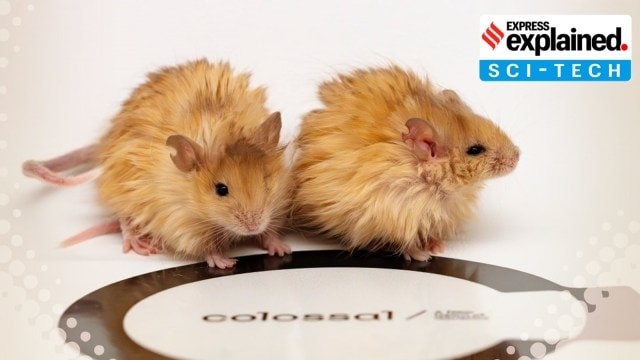
- 12 Mar 2025
In News:
Scientists at Colossal Biosciences, a US-based biotechnology company, have genetically engineered mice with mammoth-like traits, dubbed “woolly mice”, as part of a broader project aiming to revive the extinct woolly mammoth.
What are Woolly Mice?
Woolly mice are genetically modified laboratory mice that express specific traits observed in woolly mammoths, such as thick, wavy fur and cold adaptation features. These traits were introduced to validate the feasibility of editing multiple genes for the potential de-extinction of the woolly mammoth.
How Were Woolly Mice Created?
- Methodology:
- Scientists compared ancient DNA of woolly mammoths with modern Asian elephants (their closest living relatives) to identify unique cold-adaptation genetic variants.
- Selected 10 mammoth-associated gene variants related to hair length, thickness, color, and fat metabolism were mapped to their equivalents in lab mice.
- Using CRISPR gene-editing technology, seven key genes were edited across eight changes in mouse embryos.
- Key Gene Edits:
- FGF5: Regulated hair cycle, producing hair three times longer than normal.
- MC1R: Altered coat color to golden, similar to mammoths.
- FABP2: Modified lipid metabolism for potential cold resistance.
- Additional genes affected hair texture, follicle structure, and whisker curling.
Significance of the Experiment
- Proof of Concept: Demonstrates that mammoth-like traits can be recreated in living organisms through targeted gene editing.
- Model for Cold Adaptation Studies: Offers insights into thermoregulation and climate resilience, useful for biodiversity research.
- Potential for Conservation: Highlights the emerging role of gene editing in preventing extinctions and enhancing species’ adaptability.
Scientific and Ethical Concerns
- Some experts argue that the research lacks conclusive evidence that the mice are truly cold-adapted.
- Critics note that while physical traits were achieved, this does not equate to reviving a mammoth, but rather mimicking select features in a different organism.
- There are broader debates on whether such de-extinction efforts are beneficial or divert resources from conserving existing endangered species.
ParvatmalaPariyojana
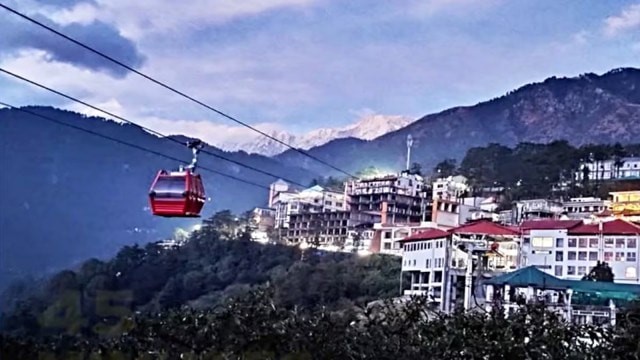
- 12 Mar 2025
In News:
The ParvatmalaPariyojana, launched in the Union Budget 2022–23, is a Central Government initiative aimed at developing ropeway infrastructure across the country, especially in hilly, forested, and difficult terrains. It aims to provide safe, sustainable, and efficient transport alternatives to reduce congestion, improve tourism, and enhance last-mile connectivity.
Key Features of the Programme
- Implementing Agency:National Highways Logistics Management Limited (NHLML), a 100% SPV of NHAI, under the Ministry of Road Transport & Highways (MoRTH).
- Funding Model:
- Projects are implemented under the Public-Private Partnership (PPP) model, specifically Design-Build-Finance-Operate-Transfer (DBFOT) mode.
- The Government of India contributes ~60% of the total cost.
- Target:Development of over 250 ropeway projects covering 1,200+ km, with an estimated investment of ?1.25 lakh crore.
- Budget Allocation:?300 crore was allocated in FY 2024–25, with ?200 crore utilized by December 2024.
Recent Cabinet Approvals in Uttarakhand (March 2025)
Two major ropeway projects under the scheme received Union Cabinet approval:
- Govindghat to Hemkund Sahib Ji Ropeway
- Length: 12.4 km
- Technology:
- Monocable Detachable Gondola (MDG): Govindghat to Ghangaria (10.55 km)
- Tri-cable Detachable Gondola (3S): Ghangaria to Hemkund Sahib (1.85 km)
- Capacity: 1,100 passengers/hour/direction (PPHPD); up to 11,000 passengers/day
- Elevation: Hemkund Sahib is located at 15,000 ft in Chamoli district
- Pilgrim Footfall: Approx. 1.5–2 lakh annually
- Sonprayag to Kedarnath Ropeway
- Length: 12.9 km
- Technology: Tri-cable Detachable Gondola (3S)
- Capacity: 1,800 PPHPD; up to 18,000 passengers/day
- Elevation: Kedarnath is at 3,583 m (11,968 ft) in Rudraprayag district
- Pilgrim Footfall: Around 20 lakh annually
- Total Project Cost: Over ?6,811 crore
Advantages of Ropeways
- Lower land acquisition requirements
- Suitable for eco-sensitive and congested areas
- More cost-effective than roads in difficult terrains despite higher construction cost per km
- Boosts religious and adventure tourism, generating local employment and economic development
Other Ropeway Projects (2024–25 Update)
- Under Construction:Varanasi Ropeway (Uttar Pradesh): 3.85 km
- Awarded Projects:Bijli Mahadev (HP), Dhosi Hill (Haryana), Mahakaleshwar Temple (MP) – Total 4.93 km
PashuAushadhi Initiative
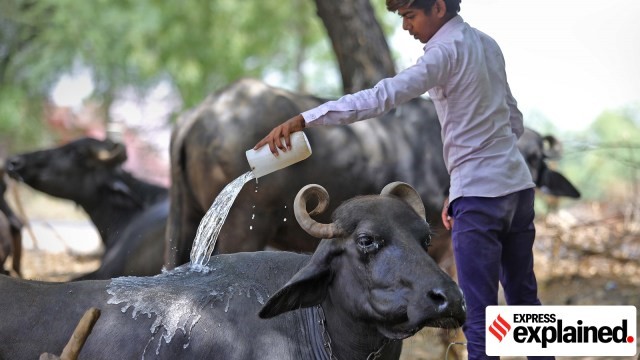
- 12 Mar 2025
In News:
The Government of India has launched the PashuAushadhi initiative to establish dedicated stores across the country offering affordable, high-quality generic veterinary medicines. This move aims to reduce the out-of-pocket expenditure of farmers and enhance animal health and productivity, especially in the livestock and dairy sectors.
Key Features:
- Modelled on PMBJK: Inspired by the success of the Pradhan Mantri BharatiyaJanaushadhiKendras (PMBJK) that provide generic human medicines, the PashuAushadhiKendras will serve the same purpose for animals.
- Affordable Veterinary Drugs: These Kendras will provide non-branded (generic) veterinary medicines at significantly lower prices.
- Ethnoveterinary Medicines: Alongside allopathic drugs, they will also stock traditional remedies based on indigenous knowledge, compiled by the National Dairy Development Board (NDDB). These include formulations for fever, diarrhoea, indigestion, mastitis, and more.
Implementation Framework
- The initiative is part of the revised Livestock Health and Disease Control Programme (LHDCP), approved by the Union Cabinet.
- Run by Co-operative Societies & PM-KisanSamriddhiKendras (PMKSKs).
- An initial budget of ?75 crore has been allocated under the LHDCP for veterinary medicine access and sales incentives.
Livestock Health and Disease Control Programme (LHDCP)
- With an outlay of ?3,880 crore for 2024–25 and 2025–26, the LHDCP focuses on:
- Prophylactic vaccination against major animal diseases (e.g., FMD, Brucellosis, CSF, PPR, Lumpy Skin Disease).
- Disease surveillance and veterinary infrastructure strengthening.
- Capacity building of veterinary services across India.
Need and Significance
- As per the 20th Livestock Census (2019), India has 535.78 million livestock, including over 302 million bovines.
- Livestock productivity is often hampered by preventable diseases.
- Farmers bear significant expenses on veterinary care, highlighting the need for cost-effective treatment options.
Antarctic Circumpolar Current (ACC) Slowing Down
- 12 Mar 2025
In News:
Recent scientific studies have revealed that the Antarctic Circumpolar Current (ACC)—the strongest and most powerful ocean current on Earth—is slowing down due to accelerated melting of Antarctic ice sheets caused by global warming.
What is ACC?
- The ACC flows clockwise around Antarctica and is the only ocean current that connects the Atlantic, Pacific, and Indian Oceans.
- It is five times stronger than the Gulf Stream and over 100 times more powerful than the Amazon River.
- Driven by strong westerly winds, it is the largest wind-driven ocean current and plays a vital role in regulating the Earth’s climate.
Key Functions and Significance
- Climate Regulation: Distributes heat, nutrients, and water across ocean basins.
- Carbon Sink: Aids in oceanic absorption of atmospheric carbon dioxide, mitigating global warming.
- Marine Barrier: Acts as a natural wall preventing invasive species (e.g., bull kelp, mollusks, shrimp) from reaching Antarctica.
- Prevents Warm Water Intrusion: Helps keep warm ocean currents away from the fragile Antarctic ice shelves.
Findings from Recent Research
- A study by the University of Melbourne and NORCE Norwegian Research Centre, published in Environmental Research Letters, warns that the ACC could slow down by 20% by 2050 under high emissions scenarios.
- Researchers used high-resolution ocean and sea ice simulations on Australia’s GADI supercomputer to project these changes.
- The weakening is largely attributed to the freshwater input from melting ice, which alters ocean salinity and disrupts the formation of Antarctic Bottom Water (AABW)—a crucial component of global ocean circulation.
Reasons for ACC Weakening
- Freshwater Dilution: Melting ice reduces salinity, weakening the density-driven AABW circulation.
- Altered Wind Patterns: Climate change may shift westerly wind patterns that drive the ACC.
- Positive Feedback Loop: Reduced sea ice further warms oceans, accelerating ice melt and weakening the current further.
Potential Global Impacts
- Climate Extremes: Disruption in global heat distribution may lead to increased climate variability and extreme weather events.
- Accelerated Global Warming: Slower circulation reduces the ocean’s carbon sequestration capacity.
- Biodiversity Threats: Invasive species could reach Antarctica, disrupting native ecosystems and food chains (e.g., penguins and krill).
- Global Ocean Circulation Impact: AABW weakening may disrupt the thermohaline circulation affecting global ocean systems.
AI Kosha
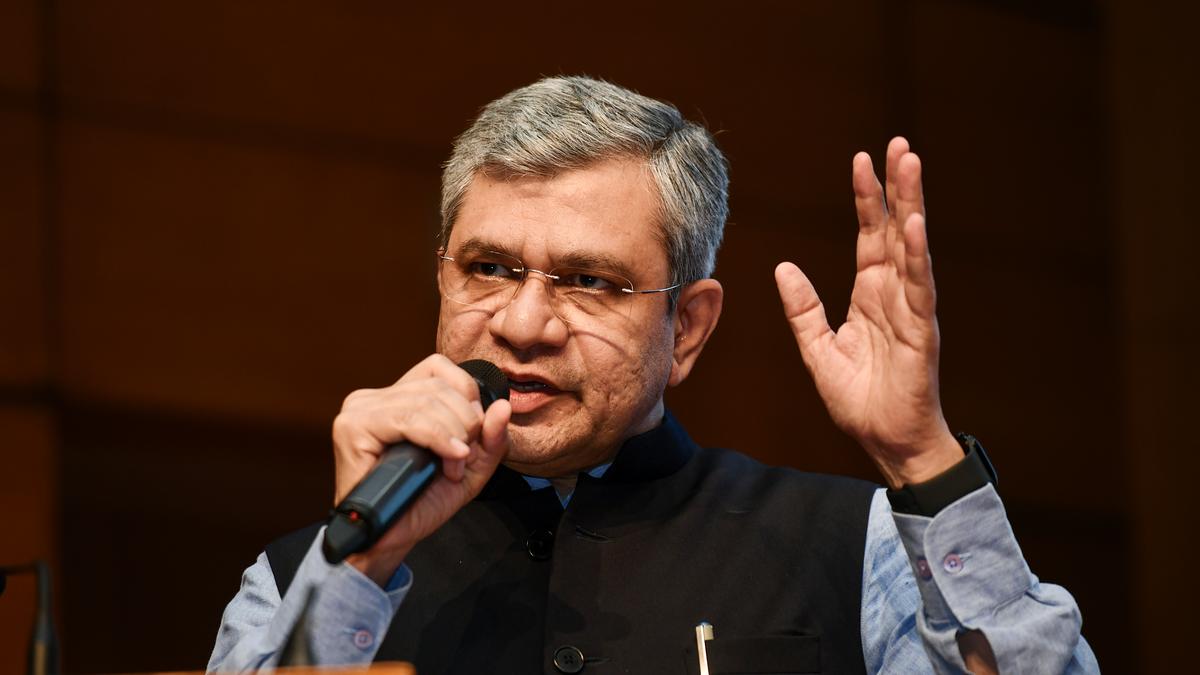
- 12 Mar 2025
In News
The Ministry of Electronics and Information Technology (MeitY) has launched AI Kosha, a secure platform to catalyze Artificial Intelligence (AI) innovation by providing centralized access to high-quality datasets, models, and development tools. This initiative is part of the broader IndiaAI Mission, which has an outlay of ?10,371 crore and aims to democratize AI access and boost research and governance applications.
Key Features and Infrastructure
- Datasets & Models: AI Kosha hosts 316 datasets and over 80 AI models, covering areas such as Indian language translation, health, census, meteorology, pollution, and satellite imagery.
- AI Sandbox Environment: Offers integrated development tools, tutorials, and an IDE for training AI models.
- Security Protocols: Implements encryption, secure API-based access, real-time threat filtering, and tiered permissions for users (researchers, startups, government bodies).
- AI-readiness Scoring: Aids users in selecting relevant and usable datasets.
Compute Capacity Boost
Under the Compute Capacity pillar of the IndiaAI Mission, the government has commissioned 14,000 GPUs (up from 10,000 announced earlier in 2025) to support shared access for startups and academic institutions. This infrastructure is vital for training large AI models, particularly foundational models tailored for Indian needs.
Policy and Data Governance Background
- AI Kosha complements earlier government efforts like data.gov.in, which already hosts 12,000+ public datasets.
- A 2018 committee, led by Infosys co-founder Kris Gopalakrishnan, proposed access to non-personal data from private firms to promote innovation—a proposal that faced resistance from industry stakeholders.
- The platform promotes ethically sourced and consent-based datasets, aligning with responsible AI practices.
Challenges
- Limited Dataset Diversity: Current datasets are mostly government or research-based, limiting private-sector applicability.
- Access Barriers: Strong security protocols, while crucial, may hinder ease of access for some innovators.
- Early Stage Evolution: Wider participation from industry is essential to expand dataset variety and utility.
5th Edition of Lineman Diwas
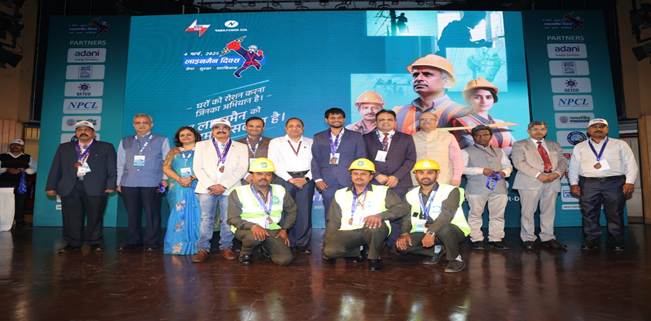
- 11 Mar 2025
In News:
The Central Electricity Authority (CEA), in partnership with Tata Power Delhi Distribution Ltd (Tata Power-DDL), organized the 5th Edition of Lineman Diwas on March 4, 2025, in New Delhi. The event commemorates the invaluable service of linemen and ground maintenance staff—frontline workers vital to ensuring uninterrupted power supply across India.
Key Highlights:
- Theme: Seva, Suraksha, Swabhiman (Service, Safety, Self-respect).
- Over 180 linemen from 45+ state and private utilities attended.
- Recognized 5 linemen and 4 DISCOMs for exemplary safety and service standards.
- Special Anthem on linemen launched by CEA Chairperson Ghanshyam Prasad.
- Safety videos and demonstrations of modern equipment were showcased.
- Participants visited the Distribution Operations & Safety Excellence Center (DOSEC) for exposure to training modules and tools.
The event highlighted the importance of Hotline Maintenance Training, which enables linemen to safely work on live power lines, improving both worker safety and power grid reliability.
About Central Electricity Authority (CEA):
- Statutory Body under the Ministry of Power, Govt. of India.
- Established: Originally under Electricity (Supply) Act, 1948; reconstituted under Electricity Act, 2003.
- Headquarters: New Delhi.
- Functions:
- Advises government on electricity policy, planning, and technical standards.
- Monitors power generation, transmission, and distribution efficiency.
- Promotes safety, training, and regulatory compliance.
- Key Divisions:
- Power Planning & Monitoring
- Grid Operations & Transmission
- Distribution & Regulatory Affairs
- Safety & Training
Japan’s Largest Wildfire in Decades
- 11 Mar 2025
In News:
Japan is currently battling its most extensive wildfire in over three decades, with flames spreading across approximately 1,200 hectares of forest in Ofunato, a coastal city in Iwate Prefecture, located in northern Honshu Island. This is Japan's largest wildfire since the 1992 Kushiro fire in Hokkaido, which burned 1,030 hectares.
The cause remains unknown, and the situation is worsened by record-low rainfall (2.5 mm in February) and the hottest year on record in 2023, highlighting the growing impact of climate change. The region is also vulnerable due to its dense forests, dry winter winds, and limited precipitation during February–April, a peak season for wildfires in Japan.
About Ofunato and Iwate Prefecture
- Location: Ofunato is in Iwate Prefecture, northern Japan, along the Pacific coast.
- Ecological Importance: It features mountainous terrain, coastal forests, and is known for fisheries, tourism, and biodiversity.
Japan – Geographical Context
- Location: East Asia, surrounded by the Pacific Ocean.
- Capital: Tokyo.
- Neighbouring Countries (via maritime boundaries): China, South Korea, North Korea, Russia, Taiwan.
- Geological Features:
- Over 80% mountainous terrain; part of the Pacific Ring of Fire (earthquake and volcanic activity-prone).
- Major Islands: Honshu (location of Ofunato), Hokkaido, Kyushu, Shikoku.
- Climate: Ranges from humid subtropical (south) to cold continental (north).
- Major Rivers: Shinano, Tone, Kiso.
Gandiva (Astra MK-III) Missile
- 11 Mar 2025
In News:
India’s cutting-edge air-to-air missile, previously known as Astra MK-III, has been officially renamed Gandiva, inspired by the mythical bow wielded by Arjuna in the epic Mahabharata. This rebranding marks a symbolic nod to India's cultural legacy while highlighting its growing defence capabilities.
Overview of the Gandiva (Astra MK-III) Missile
Developed by the Defence Research and Development Organisation (DRDO), Gandiva is a beyond-visual-range (BVR) missile currently undergoing final stages of development. It is designed to be equipped on frontline fighter aircraft such as the Sukhoi Su-30MKI and LCA Tejas of the Indian Air Force (IAF).
Upon induction, Gandiva is set to become one of the longest-range air-to-air BVR missiles globally, significantly enhancing India's aerial combat capabilities.
Key Capabilities and Features
- Engagement Range:
- Up to 340 km when the target is flying at 20 km altitude.
- Around 190 km if the target is at an altitude of 8 km.
- Propulsion System: Powered by a dual-fuel ducted ramjet engine, allowing high-speed performance across various altitudes—from sea level to 20 km.
- Speed and Maneuverability:
- Launch speed: Between Mach 0.8 and 2.2.
- Target engagement speed: Between Mach 2.0 and 3.6.
- Can engage agile aerial targets with an angle of attack up to 20 degrees.
- Altitude Adaptability: Features a ±10 km snap-up/snap-down capability, enabling it to intercept targets that are significantly above or below the altitude of the launching aircraft.
Strategic Importance
Gandiva is designed to neutralize a wide spectrum of aerial threats, including:
- Enemy fighter jets
- Bombers and transport aircraft
- Aerial refueling planes
- AWACS (Airborne Warning and Control Systems)
Open Market Operations
- 11 Mar 2025
In News:
The Reserve Bank of India (RBI) has announced a liquidity injection of ?1.9 lakh crore into the banking system through Open Market Operations (OMOs) and USD/INR forex swaps, in response to tightening liquidity conditions observed since December 2024.
What are Open Market Operations (OMOs)?
- Open Market Operations refer to the buying and selling of government securities in the open market by the central bank to regulate liquidity in the banking system.
- It is a monetary policy tool used to manage inflation and ensure financial stability.
How OMOs Work:
- To inject liquidity: RBI purchases government securities from banks, increasing their cash reserves, which lowers interest rates, encourages lending, and boosts economic activity.
- To absorb liquidity: RBI sells government securities, reducing cash reserves in the system, which raises interest rates, discourages excessive lending, and cools inflation.
RBI’s Recent Measures (March 2025):
- OMO Purchase Auctions:Government securities worth ?1 lakh crore to be bought in two tranches of ?50,000 crore each on March 12 and March 18.
- Forex Swap Auction:
- A USD/INR Buy/Sell Swap worth $10 billion with a 36-month tenor, scheduled for March 24, to inject long-term dollar liquidity.
- A similar $10 billion swap was conducted on February 28, which saw strong demand.
Ayushman Arogya Mandirs
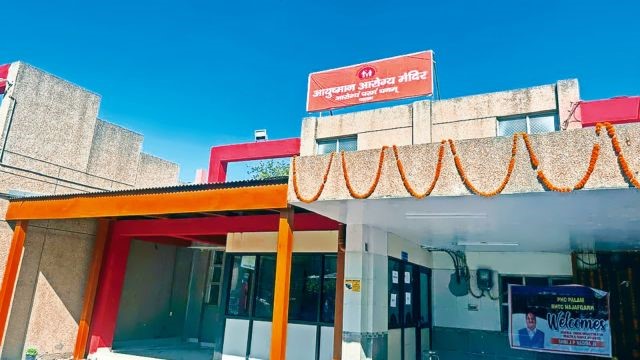
- 11 Mar 2025
In News:
The Government of India has operationalisedAyushman Arogya Mandirs (AAMs) across the country, marking a transformative step towards holistic, accessible, and preventive health care. As of January 31, 2025, a total of 1,76,141 Ayushman Arogya Mandirs have been established nationwide.
Recent Development in Delhi:
Recently three Primary Health Centres (PHCs) in Najafgarh, Palam, and Ujwa were converted into Ayushman Arogya Mandirs. These are among the first AAMs in Delhi, focused on:
- Preventive and promotive healthcare, beyond clinical and immunisation services.
- Free access to 172 medicines and 63 diagnostic tests.
- Dissemination of health awareness via health talks and educational displays (e.g., ear health, lifestyle diseases).
- Community outreach through ASHA and ANM workers under IEC and BCC programmes.
These centres operate under the Rural Health Training Centre, Najafgarh, affiliated with the Union Ministry of Health and Family Welfare. The Najafgarh PHC, one of Delhi’s oldest (established in 1937), is undergoing certification under National Quality Assurance Standards (NQAS) and Indian Public Health Standards (IPHS).
Key Features of Ayushman Arogya Mandirs:
- Comprehensive Primary Health Care (CPHC): Includes preventive, promotive, curative, rehabilitative, and palliative services.
- Staff trained in yoga, lifestyle counselling, diabetes and blood pressure screening.
- Universal, free healthcare services located closer to communities.
Institutional Framework:
Ayushman Arogya Mandir is a rebranded initiative under the broader Ayushman Bharat scheme, launched as per the National Health Policy 2017 to achieve Universal Health Coverage (UHC).
It consists of two major components:
- Ayushman Arogya Mandirs – Delivering comprehensive primary healthcare services.
- Pradhan Mantri Jan Arogya Yojana (PM-JAY) – Providing health insurance coverage of ?5 lakh per family/year for secondary and tertiary hospitalization to over 12 crore poor and vulnerable families (covering approximately 55 crore individuals).
Mount Erebus
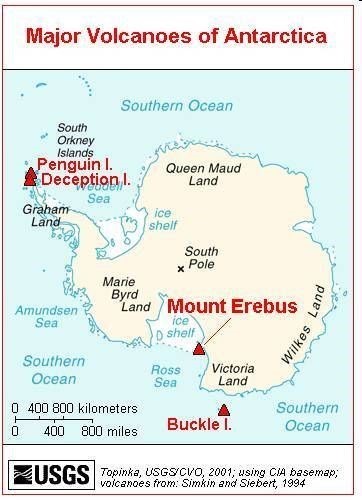
- 10 Mar 2025
In News:
- Volcanic ice caves beneath Mount Erebus host thriving microbial life, offering insights into extremophile survival and potential life on alien planets.
About Mount Erebus:
- Location: Ross Island, Antarctica, in the Ross Sea.
- Type:Glaciated intraplate stratovolcano; part of the Pacific Ring of Fire.
- Altitude:3,794 meters (12,448 feet) above sea level.
- Rank:Second tallest volcano in Antarctica (after Mount Sidley).
- Discovered: In 1841 by British explorer Sir James Clark Ross.
- Name Origin: Named after Ross’s ship, HMS Erebus.
Volcanic Activity:
- Southernmost active volcano on Earth.
- Continuously active since 1972.
- Eruptions are Strombolian in nature — small, explosive, with lava bombs ejected onto crater rim.
- Contains a persistent lava lake with alkalic lava, typical of rift volcanoes.
Proximity to Human Activity:
- Near McMurdo Station, the largest Antarctic research base, just ~40 km away.
Scientific Significance:
- The microbial ecosystems in volcanic ice caves could help understand:
- Life in extreme environments
- Astrobiological prospects on Mars or Europa
Bollgard-3
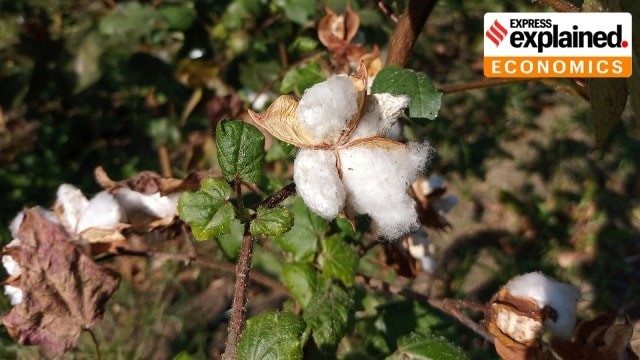
- 10 Mar 2025
In News:
Punjab's cotton sector is facing a severe crisis due to increasing pest infestations and declining yields. In response, there is a rising demand for advanced genetically modified (GM) cotton varieties, particularly Bollgard-3, ahead of the 2025 sowing season.
Key Facts:
Decline in Cotton Cultivation in Punjab:
- Cotton acreage in Punjab has drastically declined from ~8 lakh hectares (1990s) to just 1 lakh hectares (2024).
- The ginning industry has also shrunk — only 22 ginning units remain functional, down from 422 in 2004.
- The main causes are whitefly (2015–16) and pink bollworm (2018–19) infestations.
About Bollgard Series of Bt Cotton:
Version Introduced in India Features
Bollgard-1 2002 Contains Cry1Ac gene — limited pest resistance
Bollgard-2 2006 Added Cry2Ab gene — wider pest control, still ineffective against
whiteflies and pink bollworms
Bollgard-3 Not approved in India Contains Cry1Ac, Cry2Ab, and Vip3A — effective against
lepidopteran pests like pink bollworm
- Bollgard-3, developed by Monsanto, offers enhanced pest resistance, but remains unapproved in India despite global usage.
- Bt (Bacillus thuringiensis) is a soil-dwelling bacterium used in GM crops for pest resistance by producing insecticidal proteins.
Alternative in Pipeline – BG-2RRF:
- Bollgard-2 Roundup Ready Flex (BG-2RRF) is aherbicide-tolerant GM cotton variety pending final regulatory approval in India.
- Enables better weed control and potentially reduces pest hosts, boosting yield.
- Field trials for BG-2RRF were conducted in 2012–13, but commercial approval remains pending.
- Experts argue that regulatory hurdles are delaying the adoption of next-generation GM seed technologies, affecting India's cotton competitiveness.
Current Agronomic Recommendations:
- In absence of new GM varieties, experts suggest:
- High-density planting
- Drip fertigation
- Proper seeding and mulching
- However, pest management remains a critical issue under current practices.
Comparative Global Context:
- Countries like Brazil are using Bollgard-5, achieving yields of 2400 kg/ha, compared to 450 kg/ha in India.
- India's profit margin from cotton is just 15%, whereas Brazil enjoys 85% margins due to advanced biotech adoption.
Rare Civet Cat
- 10 Mar 2025
In News:
Recently, a rare civet cat, typically native to the Seshachalam forests near Tirumala, was unexpectedly sighted near Tadepalli in Guntur district, Andhra Pradesh. The animal entered a residential area, startling locals, and was later safely rescued and examined by forest officials.
About Civet Cats
- Taxonomy:Civets belong to the Viverridae family, which includes civets, genets, oyans, and linsangs. There are 15–20 species across 10–12 genera.
- Distribution:Found in Africa, southern Europe, and Asia, including eight wild species in India.
- Common Palm Civet and Small Indian Civet are widely distributed.
- The Malabar Large-spotted Civet (Viverracivettina) is critically endangered and endemic to the Western Ghats.
- Conservation Status:The Malabar Civet is listed as Critically Endangered under the IUCN Red List.
Physical Characteristics:
- Appearance: Cat-like, with thickly furred tail, pointed snout, and small ears.
- Size: Body length: 40–85 cm; Tail: 13–66 cm; Weight: 1.5–11 kg.
- Coloration: Usually buff or grayish, with black spots, stripes, or both.
Behavior and Habitat:
- Nocturnal and Solitary: Typically dwell in tree hollows, rocks, or similar secluded areas.
- Diet: Primarily frugivorous and insectivorous, occasionally feeding on small animals.
- Habitat Range: Though mostly forest-dwelling, rare sightings in urban zones have occurred, as seen in the Tadepalli incident.
Significance of Recent Sighting:
- The civet descended from Tadepalli hills and entered a home, prompting forest department intervention.
- Identified as a rare species similar to African civets.
- Medically examined, found healthy, and is to be rehabilitated into the wild.
- The incident highlights growing human-wildlife interactions and the need for urban wildlife awareness.
Dragon Copilot
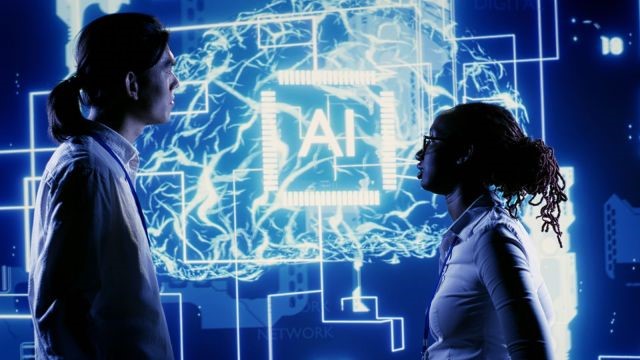
- 10 Mar 2025
In News:
Microsoft has launched Dragon Copilot, a voice-activated AI assistant designed specifically for the healthcare sector. It aims to reduce administrative burdens on clinicians by automating documentation and providing quick access to medical information.
Key Features and Functionalities:
- Platform Integration: Part of Microsoft Cloud for Healthcare, Dragon Copilot integrates with Electronic Health Records (EHR) and is accessible via desktop, browser, or mobile app.
- Technology Base: Built on Nuance’s Dragon Medical One (DMO) and DAX (Dragon Ambient eXperience) platforms, which have supported transcription of billions of patient records and over 3 million ambient patient interactions.
- Voice & AI Capabilities:
- Uses natural language dictation and ambient listening technologies.
- Enhanced with generative AI and healthcare-specific safeguards.
- Allows drafting of memos, referral letters, clinical summaries, and after-visit notes in personalized formats.
- Facilitates real-time voice-to-text transcription and AI-generated notes via user prompts or templates.
- Supports automated search for verified medical information.
Benefits:
- Reduces clinician paperwork and burnout, enhancing focus on patient care.
- Survey Data (Microsoft Findings):
- Saves ~5 minutes per patient interaction.
- 70% clinicians reported reduced fatigue.
- 62% were less likely to leave their organizations.
- 93% patients reported improved experiences.
Concerns and Risks of Healthcare AI:
- AI Hallucinations: Tools like OpenAI’s Whisper have produced fictitious content, including inappropriate or incorrect medical information.
- Regulatory Caution:
- The US FDA warns of risks from generative AI in healthcare, including false diagnoses or biased outputs.
- Emphasizes the need for transparent and accountable development practices.
- Microsoft’s Response:
- Claims to have integrated “clinical, chat, and compliance safeguards” into Dragon Copilot.
- Built in alignment with Microsoft’s Responsible AI principles, although technical specifics remain undisclosed.
Broader AI Healthcare Landscape:
- Companies like Google Cloud, Abridge, and Suki are developing similar AI-based healthcare assistants.
- Growing interest in generative AI for reducing clinician workload and improving patient outcomes is driving innovation and investment across the sector.
Doubtful (D) Voters in Assam
- 10 Mar 2025
In News:
The issue of ‘D’ (Doubtful) voters recently resurfaced in the Assam Legislative Assembly, with the Opposition demanding closure of the state’s lone detention centre (now termed a transit camp) and the tabling of the National Register of Citizens (NRC) report.
Who are ‘D’ Voters?
‘D’ voters are individuals whose Indian citizenship is under suspicion. Introduced by the Election Commission of India (ECI) in 1997 specifically for Assam, these individuals are barred from voting or contesting elections until their citizenship is verified.
Legal and Procedural Aspects:
- Not Defined in Law: The term 'Doubtful Voter' is not defined under the Citizenship Act, 1955 or the Citizenship Rules, 2003.
- As per Citizenship Rules, 2003:
- The Local Registrar must mark individuals with doubtful citizenship in the National Population Register (NPR) for further verification.
- Affected individuals must be informed through a prescribed format and granted a hearing before the Taluk or Sub-district Registrar.
- A decision on citizenship status must be made within 90 days.
- Foreigners Tribunal (FT): Cases of D-voters are referred to FTs, which decide whether the person is an Indian citizen or a foreigner. Based on the verdict, individuals can be:
- Cleared and subsequently included in the NRC and electoral rolls.
- Declared foreigners, leading to deportation or detention.
Key Features of D-Voter Status:
- Temporary Tag: The 'D' classification is not permanent and must be resolved within a set timeframe.
- Appeal Mechanism: Individuals can appeal to the Foreigners Tribunal for clearance.
- Impact on Families: Often, some members of a family are citizens while others are tagged as D-voters, leading to legal and social complications.
- Detention Concerns: Several individuals, including potential Indian citizens, have been detained for years without a clear mechanism for release.
Recent Developments:
- Political demands in Assam include the closure of detention centres and transparency regarding NRC implementation.
- Debates continue over the legal ambiguity and humanitarian implications of the D-voter category.
U.S. Reciprocal Tariffs
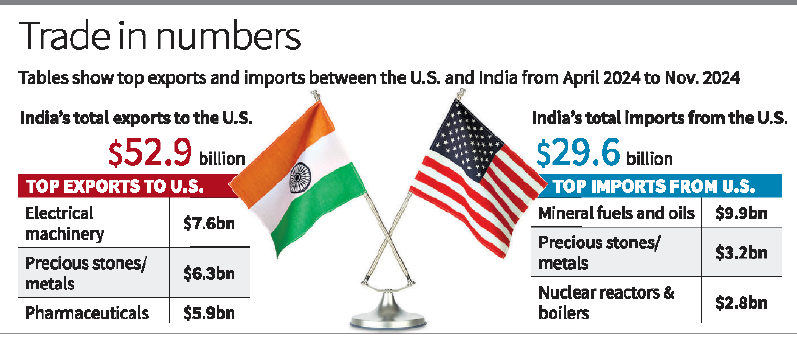
- 09 Mar 2025
In News:
On April 2, 2025, the United States is set to implement reciprocal tariffs as announced by President Donald Trump during his address to a joint session of the U.S. Congress. The move targets major trade partners including India, China, the European Union, Canada, and Mexico.
What Are Reciprocal Tariffs?
- Definition: A reciprocal tariff is a trade measure in which a country imposes import duties equal to the tariffs its exports face in other nations.
- Objective: To establish a level playing field, correct trade imbalances, and respond to unfair tariff structures by trading partners.
- Application:
- If a foreign nation imposes high tariffs on U.S. goods, the U.S. will match that rate on goods imported from that country.
- Applies to goods, services, and even non-tariff barriers limiting U.S. market access.
Why Now? Trump’s Trade Strategy
- President Trump cited India’s high tariffs on automobile imports (reportedly over 100%) as an example of unfair trade.
- The U.S. also flagged China, EU, Brazil, and Mexico for imposing higher duties on U.S. exports.
- Trump emphasized that the U.S. has been “taken advantage of for too long” and that reciprocal tariffs are necessary to protect American jobs and industry.
WTO Implications
- May violate WTO's Most-Favoured-Nation (MFN) rule, which mandates equal treatment of trade partners.
- The U.S. could invoke Article XX (general exceptions) or Article XXI (national security exception) of the WTO Agreement to justify its policy.
Potential Impacts of Reciprocal Tariffs
Positive Impacts Negative Impacts
Boosts U.S. manufacturing by reducing import dependency May trigger retaliatory tariffs,
escalating trade wars
Encourages tariff reductions by partner nations Leads to higher import prices and
consumer inflation
Aims to reduce the trade deficit Causes economic uncertainty
and hurts investor confidence
Promotes domestic job creation May lead to WTO disputes and
strain diplomatic relations
PUNCH Mission

- 09 Mar 2025
In News:
NASA is set to launch the PUNCH (Polarimeter to Unify the Corona and Heliosphere) mission on March 6, 2025, from Vandenberg Space Force Base, California. It will be the third major solar mission launched globally in the past 18 months.
About the PUNCH Mission:
Aspect Details
Agency NASA (National Aeronautics and Space Administration)
Launch Date March 6, 2025
Mission Objective Study the Sun’s corona (outer atmosphere) and how solar wind evolves as it moves
into the heliosphere
Unique Features - First dedicated mission to image the transition from the corona to the heliosphere
- Will use four identical suitcase-sized satellites for continuous imaging of the inner corona
Importance - Improves understanding of space weather
- Helps predict solar storms, safeguarding satellites, astronauts, and
communication networks
What is the Solar Cycle?
- The solar cycle is an ~11-year periodic change in the Sun’s magnetic field, where the north and south poles flip positions.
- This cycle governs the level of solar activity, including sunspots, solar flares, and coronal mass ejections (CMEs).
- Solar Maximum: Period of peak activity with increased sunspots and solar eruptions.
- Solar Minimum: Period of least activity.
The current solar cycle began gaining momentum around May 2022, and solar activity remained above normal through 2024. The solar maximum is anticipated around 2025, offering an ideal window for solar observation.
Why the Surge in Solar Missions?
- Solar maximum periods offer the best conditions to observe high-energy events like flares and CMEs.
- Scientists aim to maximize data collection before the next solar minimum (next solar max expected ~2035–36).
- Monitoring solar activity is crucial because solar storms can disrupt satellite communications, navigation systems, and power grids on Earth.
Recent Major Solar Missions (2023–25):
Mission Agency Launch Date Purpose
Aditya-L1 ISRO (India) Sept 2, 2023 India’s first solar observatory; studies solar flares, solar winds, and magnetic fields
Proba-3 ESA (Europe) Dec 4, 2024 Dual-satellite mission to study solar corona and space weather
PUNCH NASA (USA) Mar 6, 2025 First mission to study continuous evolution from solar corona to heliosphere
Lake Tanganyika
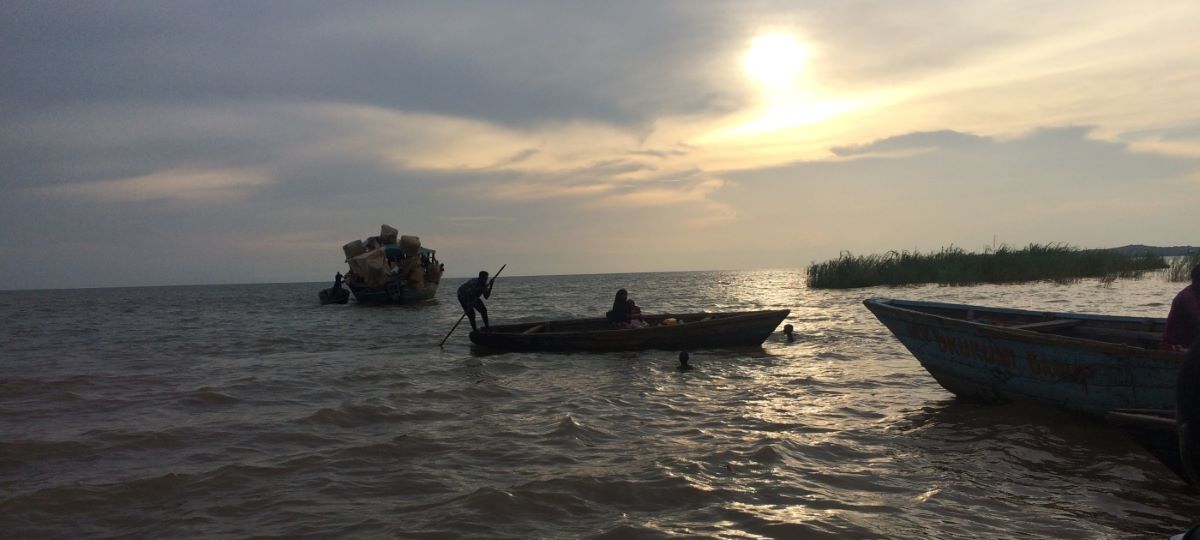
- 09 Mar 2025
In News:
- The countries bordering Lake Tanganyika—Burundi, Democratic Republic of Congo (DRC), Tanzania, and Zambia—have launched a five-year biodiversity conservation project.
- The initiative, led by the United Nations Environment Programme (UNEP) and funded by the Global Environment Facility (GEF), aims to tackle transboundary threats to the lake’s biodiversity.
About Lake Tanganyika:
Feature Details
Location East Africa
Bordering Countries Burundi, DRC, Tanzania, Zambia
Length Over 400 miles (Longest freshwater lake in the world by length)
Depth One of the world’s deepest lakes
Geological Setting Located in the Western Rift Valley
Major Inflows Malagarasi, Ruzizi, Kalambo Rivers
Outflow Lukuga River (into the Lualaba River)
Flora Located at the floral transition zone of eastern and western Africa; oil palms found along shores
Livelihood Agriculture (rice, subsistence crops) and fishing are common
Key Features of the Conservation Project:
- Project Title:Biodiversity Conservation, Sustainable Land Management and Enhanced Water Security in Lake Tanganyika Basin
- Budget: USD 14.5 million
- Implementing Agency: UNOPS
- Strategic Partner: Lake Tanganyika Authority
- Framework Basis: Convention on the Sustainable Management of Lake Tanganyika (2003)
Project Objectives:
- Transboundary Cooperation: Foster collaboration among the four bordering nations
- Sustainable Fisheries: Establish fishing standards, including gear type, mesh sizes, and quotas
- Critical Habitat Protection: Secure core conservation zones in three protected areas and ensure sustainable use in buffer zones
- Community Involvement: Promote local participation in fisheries management and livelihood alternatives
- Land Restoration: Rehabilitate degraded landscapes and reduce environmental stressors
- Biodiversity Protection: Align with the Kunming-Montreal Global Biodiversity Framework goals
Why It Matters:
- Biodiversity Hotspot: The basin supports over 10 million people and is home to rich and unique freshwater biodiversity
- Threats: Habitat destruction, overfishing, pollution, invasive species, climate change, and uncoordinated lake management
- Alarming Trend: Global freshwater biodiversity has declined by 84% in the last century, faster than terrestrial or marine biomes
- Economic Risk: The global value of lake ecosystem services (~USD 3 trillion) could drop by 20% by 2050 if degradation continues
Marbled Cat
- 09 Mar 2025
In News:
- Rare marbled cats (Pardofelis marmorata) were recently captured on camera traps in DehingPatkai National Park, located in Assam's Tinsukia district.
- This was part of a two-month biodiversity monitoring initiative launched in November 2024 by the Assam Forest Department in collaboration with the Wildlife Institute of India (WII).
Significance of the Sighting:
- 2–3 individuals were recorded, marking a significant discovery for biodiversity documentation in Northeast India.
- Assam's Forest Minister and conservationists hailed the event as a testament to successful conservation efforts and the rich biodiversity of DehingPatkai.
About the Marbled Cat:
- Scientific Name: Pardofelis marmorata
- IUCN Status: Near Threatened (NT)
- Habitat: Dense tropical and subtropical forests; found at elevations up to 2,500 metres
- Distribution:
- Countries: India, Nepal, Bhutan, Bangladesh, Myanmar, Thailand, Laos
- In India: Found primarily in Arunachal Pradesh, Assam, Meghalaya, and Nagaland
Physical Features:
- Small wild cat with distinctive marbled-patterned fur (brown/grey with black stripes and spots)
- Excellent arboreal climber, capable of leaping between trees
- Males weigh 4.5–9 kg; females weigh 2.5–5 kg
- Solitary and territorial; marks territory with scent
Conservation Implications:
- The sighting underscores the ecological value of DehingPatkai, a critical habitat for many rare and threatened species.
- Experts stress the need for continued research, habitat preservation, and protection of Eastern Himalayan forests to ensure the survival of elusive species like the marbled cat.
Cities Coalition for Circularity (C-3)
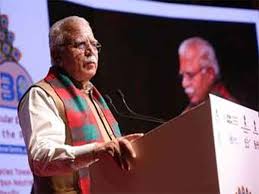
- 09 Mar 2025
In News:
Manohar Lal, Union Minister for Housing and Urban Affairs, announced the Cities Coalition for Circularity (C-3), a multi-nation alliance for city-to-city collaboration, knowledge-sharing, and private sector partnerships.
- Platform: 12th Regional 3R and Circular Economy Forum in Asia and the Pacific
- Venue: Rajasthan International Centre, Jaipur, Rajasthan
What is C-3?
- The Cities Coalition for Circularity (C-3) is a multi-national alliance aimed at enhancing city-to-city collaboration, knowledge-sharing, and public-private partnerships.
- It focuses on promoting circular economy principles, resource efficiency, and low-carbon development.
Organizers and Supporters:
- Organized by: Ministry of Housing and Urban Affairs (India), United Nations Centre for Regional Development (UNCRD), and Institute for Global Environmental Strategies (IGES)
- Supported by: United Nations ESCAP, Ministry of Environment (Japan), and other global organizations
Key Announcements:
- Formation of a Working Group to finalize the coalition’s structure and operational framework
- Adoption of the Jaipur Declaration (2025–2034) – a nonpolitical, nonbinding declaration guiding the next decade of action for resource-efficient and sustainable urban growth
Highlights of the Forum:
- Theme: Realizing Circular Societies Towards Achieving SDGs and Carbon Neutrality in Asia-Pacific
- 3R India Pavilion: Inaugurated by Union Minister and Rajasthan CM Bhajanlal Sharma, showcasing 40+ Indian and Japanese start-ups in waste management and circular solutions
What is a Circular Economy?
A circular economy is a regenerative system where:
- Products, materials, and resources are maintained in use for as long as possible
- Waste is minimized through reuse, recycling, remanufacturing, composting, etc.
- It aims to decouple economic growth from resource consumption, addressing climate change, pollution, and biodiversity loss.
Colossal A23a Iceberg
- 08 Mar 2025
In News:
The colossal iceberg A23a -- which is more than twice the size of Greater London and weighs nearly one trillion tonnes -- has been drifting north from Antarctica towards South Georgia island since 2020.
What is A23a?
A23a is currently the world’s largest iceberg, covering an area of approximately 3,672 sq. km—more than twice the size of Greater London—and weighing nearly one trillion tonnes. It calved from the Filchner Ice Shelf (Antarctica) in 1986 and remained grounded in the Weddell Sea for over 30 years before breaking free in 2020 and drifting northward.
Current Status:
As of March 2025, A23a appears to have run aground about 70–73 km from South Georgia Island in the South Atlantic Ocean. This grounding may spare the island’s rich wildlife, particularly penguins and seals, from disruption in feeding routes and breeding patterns.
Ecological Implications:
- If it had drifted closer, it could have blocked access to feeding grounds, leading to increased mortality of chicks and pups.
- In its current position, nutrients released by its melting and grounding may enhance marine food availability, supporting the local ecosystem.
- This comes as a relief after a difficult season caused by an avian flu outbreak among local wildlife.
Geopolitical Context:
- South Georgia Island is a British Overseas Territory administered by the UK but also claimed by Argentina.
- There is no permanent human population on the island, minimizing direct human impact.
Iceberg Dynamics & Climate Change Link:
- Icebergs such as A23a are natural parts of the Antarctic ice sheet lifecycle, calving from glaciers or ice shelves.
- They are made of freshwater ice, with around 90% submerged below the surface.
- While large icebergs are not new, the rate of calving and ice loss has accelerated, with Antarctic ice shelves losing ~6,000 billion tonnes of mass since 2000.
- Scientists warn that a global temperature rise of 1.5–2°C above pre-industrial levels may trigger irreversible melting, potentially causing sea-level rise of several metres.
Navigation and Fishing Impact:
- The iceberg currently poses no danger to shipping due to its visibility and size.
- However, as it breaks into smaller fragments (bergy bits), it may pose navigation hazards and force commercial fishing vessels to avoid the area.
Colossal A23a Iceberg
- 08 Mar 2025
In News:
The colossal iceberg A23a -- which is more than twice the size of Greater London and weighs nearly one trillion tonnes -- has been drifting north from Antarctica towards South Georgia island since 2020.
What is A23a?
A23a is currently the world’s largest iceberg, covering an area of approximately 3,672 sq. km—more than twice the size of Greater London—and weighing nearly one trillion tonnes. It calved from the Filchner Ice Shelf (Antarctica) in 1986 and remained grounded in the Weddell Sea for over 30 years before breaking free in 2020 and drifting northward.
Current Status:
As of March 2025, A23a appears to have run aground about 70–73 km from South Georgia Island in the South Atlantic Ocean. This grounding may spare the island’s rich wildlife, particularly penguins and seals, from disruption in feeding routes and breeding patterns.
Ecological Implications:
- If it had drifted closer, it could have blocked access to feeding grounds, leading to increased mortality of chicks and pups.
- In its current position, nutrients released by its melting and grounding may enhance marine food availability, supporting the local ecosystem.
- This comes as a relief after a difficult season caused by an avian flu outbreak among local wildlife.
Geopolitical Context:
- South Georgia Island is a British Overseas Territory administered by the UK but also claimed by Argentina.
- There is no permanent human population on the island, minimizing direct human impact.
Iceberg Dynamics & Climate Change Link:
- Icebergs such as A23a are natural parts of the Antarctic ice sheet lifecycle, calving from glaciers or ice shelves.
- They are made of freshwater ice, with around 90% submerged below the surface.
- While large icebergs are not new, the rate of calving and ice loss has accelerated, with Antarctic ice shelves losing ~6,000 billion tonnes of mass since 2000.
- Scientists warn that a global temperature rise of 1.5–2°C above pre-industrial levels may trigger irreversible melting, potentially causing sea-level rise of several metres.
Navigation and Fishing Impact:
- The iceberg currently poses no danger to shipping due to its visibility and size.
- However, as it breaks into smaller fragments (bergy bits), it may pose navigation hazards and force commercial fishing vessels to avoid the area.
Carbon Intensity

- 08 Mar 2025
What is Carbon Intensity?
Carbon intensity refers to the amount of carbon dioxide (CO?) emitted per unit of output in a particular sector or economy. It integrates environmental accountability into performance metrics across industries and nations.
- Sectoral Carbon Intensity: For example, in the steel sector, it is measured as tonnes of steel produced per tonne of CO? emitted.
- National Carbon Intensity: At the country level, it is calculated by dividing GDP per capita by CO? emissions, offering insights into how efficiently a nation grows economically while managing emissions.
Why is Carbon Intensity Important?
- It allows for the tracking of emissions relative to economic or production output, highlighting whether growth is becoming cleaner over time.
- It enables comparison across sectors and geographies by normalizing emissions data.
Relevance for India and Global Commitments:
- Under the Paris Agreement (2015), India has committed to reducing the emissions intensity of its GDP by 45% by 2030 from 2005 levels.
- Monitoring carbon intensity helps India evaluate progress toward this Nationally Determined Contribution (NDC) goal while ensuring sustainable development.
Global Context:
- China recently reported a 3.4% reduction in carbon intensity in 2024, although it fell short of its 3.9% target.
- Such data underscores the challenge of balancing economic growth with climate responsibility, especially for large emitters.
Quantum Computing
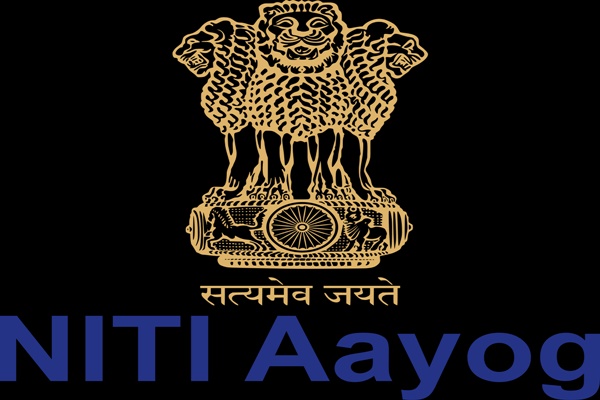
- 08 Mar 2025
In News:
NITI Ayog releases strategic paper on implication of quantum computing on national security.
What is Quantum Computing?
Quantum computing utilizes quantum bits (qubits), which leverage the principles of superposition and entanglement, enabling them to exist in multiple states simultaneously. Unlike classical bits (0 or 1), qubits can perform parallel computations, exponentially increasing processing power.
Global Landscape and India's Position
- Global Investments: Over $40 billion invested by 30+ nations.
- China: $15 billion (leader)
- USA and EU: Close followers
- India: Launched the National Quantum Mission (NQM) in 2023 with a budget of ?6,003 crore (~USD 750 million) to boost indigenous capabilities in computing, cryptography, communication, and sensing.
National Quantum Mission (NQM): Key Highlights
- Timeframe: 2023–2031
- Quantum Computers: Build systems with 50–1000 physical qubits using superconducting, photonic, and other platforms
- Secure Communication: Satellite-based secure quantum links over 2000 km within India and long-distance secure communication with other nations
- Quantum Sensing & Metrology: Development of precision navigation tools like atomic clocks and magnetometers
- Thematic Hubs (T-Hubs): To be established in premier R&D institutes in four domains:
- Quantum Computing
- Quantum Communication
- Quantum Sensing & Metrology
- Quantum Materials & Devices
Quantum Technology in Defence& National Security
- Cybersecurity
- Existing encryption standards will become obsolete.
- Urgent need for Post-Quantum Cryptography (PQC) to protect critical digital infrastructure.
- Signals Intelligence (SIGINT) & Espionage
- Quantum computers can decrypt communications at scale, risking exposure of classified diplomatic and military data.
- Enables real-time data processing for advanced surveillance.
- Military Applications
- Quantum materials improve stealth detection and weapon precision.
- Enhances autonomous weapons and navigation in GPS-denied environments.
- Logistics & Planning: Quantum AI can optimize defence logistics, battlefield resource allocation, and strategic decision-making.
- Economic Security: Quantum computing can protect or exploit vulnerabilities in financial systems, posing potential risks to economic stability.
Challenges for India
- Funding Gap: India’s allocation is modest compared to global peers.
- Hardware Dependence: Relies on imports for cryogenic systems, high-purity materials, and specialized lasers.
- Limited Industry Participation: India's ecosystem is academia-driven, with limited private sector engagement.
- Cybersecurity Risk: Legacy systems vulnerable to quantum attacks.
- Talent Shortage: Lack of trained quantum scientists and engineers.
- Geopolitical Race: Export restrictions by advanced countries can limit India’s access to key technologies.
Recent Advances in Quantum Technology
- Atom Computing/ColdQuanta: Improved qubit coherence for stable computations.
- IBM/Quantinuum: Enhanced qubit control and error reduction.
- Google Willow Chip: Introduced self-correcting qubit system.
- Microsoft Majorana-1: Developed topological qubits to improve fault tolerance.
Recommendations by NITI Aayog
- Policy & Preparedness:
- Form a National Quantum Task Force to monitor global trends and threats.
- Develop an Early Warning System for quantum vulnerabilities.
- Implement a PQC Transition Plan across critical sectors.
- R&D & Startups:
- Increase funding to scale quantum startups and indigenous hardware.
- Promote public-private partnerships to commercialize academic research.
- Supply Chain Development:Invest in domestic manufacturing for quantum components like chips and lasers.
- Global Engagements:
- Strengthen partnerships with the US, EU, and Japan.
- Advocate for easing export controls to access vital technologies.
T-72 Tanks
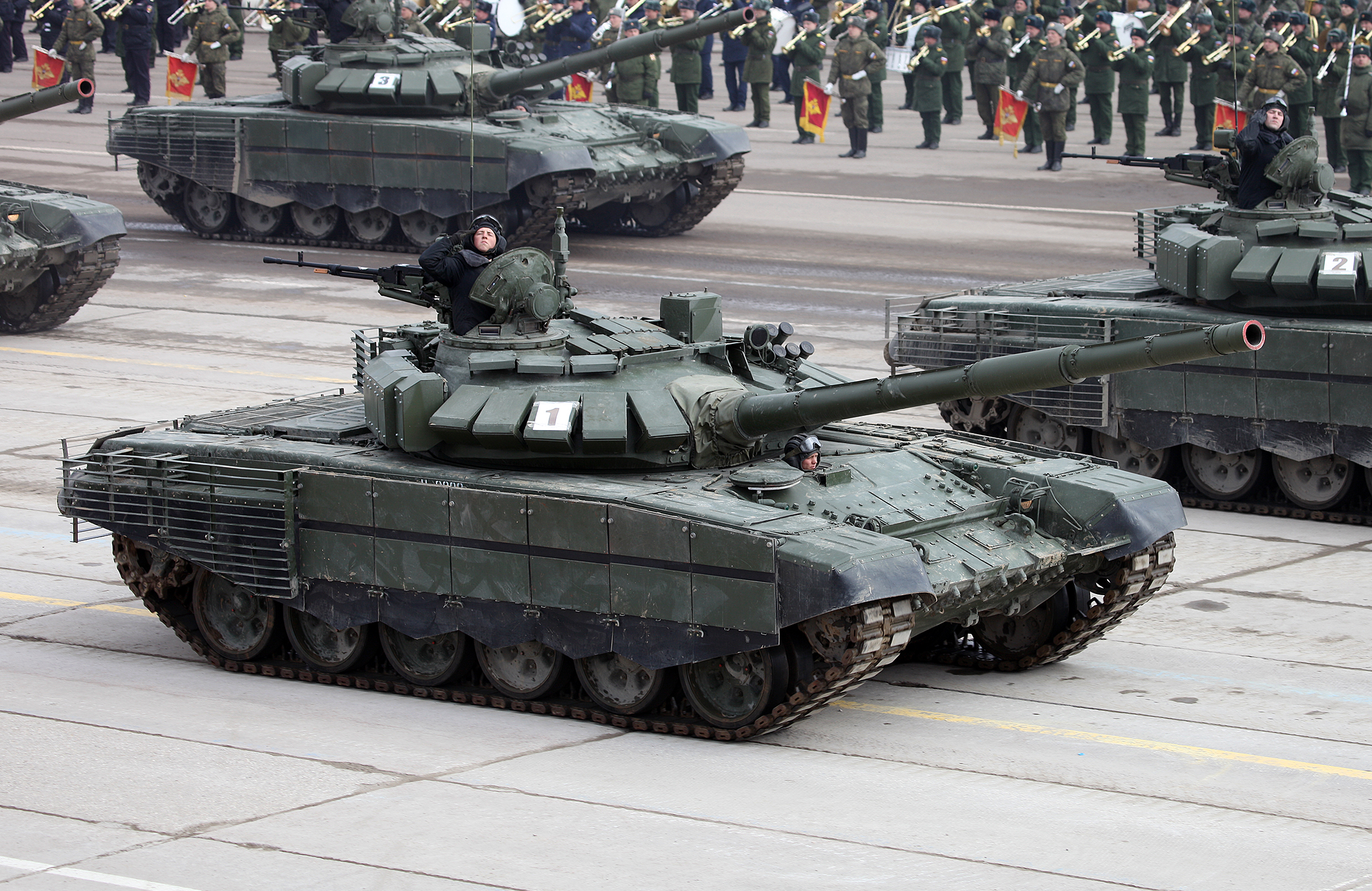
- 08 Mar 2025
In News:
India has signed a $248 million contract with Russia’s Rosoboronexport for the procurement of 1,000 horsepower (HP) engines to upgrade its fleet of T-72 main battle tanks (MBTs). This marks a significant step in enhancing the Indian Army's offensive and mobility capabilities.
Key Features of the Deal
- Engines to replace existing 780 HP ones in T-72 tanks.
- Delivered in fully formed, completely knocked down (CKD), and semi-knocked down (SKD) formats.
- Includes Transfer of Technology (ToT) to Armoured Vehicles Nigam Limited (AVNL) at the Heavy Vehicles Factory, Avadi (Chennai).
- Boosts the ‘Make in India’ initiative in the defence sector through local assembly and licensed production.
About T-72 Tanks
- Origin: Developed by the Soviet Union in the 1970s; designed by Uralvagonzavod.
- India’s Usage: Operates over 2,400 units, making it the backbone of India’s armored forces.
- Manufacturing in India: Locally produced and upgraded at the Heavy Vehicles Factory, Avadi.
Specifications
- Armament:
- 125 mm smoothbore main gun
- 7.62 mm coaxial machine gun
- 12.7 mm anti-aircraft machine gun
- Mobility: With new 1,000 HP engines, improves maneuverability and combat speed.
- Protection: Equipped with composite and reactive armour.
- Night Capability: Advanced thermal imaging systems.
- Operational Range:
- ~460 km on-road
- ~300 km off-road (with auxiliary fuel)
Strategic Significance
- Combat Readiness: Enhances battlefield performance in high-altitude and desert environments like Ladakh.
- Cost Efficiency: Upgrading older platforms is more economical than procuring new MBTs.
- India-Russia Defence Ties: Reinforces long-standing military cooperation between the two countries.
New Species of Jumping Spiders Discovered in Western Ghats
- 08 Mar 2025
In News:
Two new species of jumping spiders belonging to the genus Epidelaxia have been discovered from the Shendurney Wildlife Sanctuary in Kollam, Kerala, marking the first recorded presence of this genus in India. Previously, Epidelaxia was considered endemic to Sri Lanka.
Details of the Discovery
- Species: Epidelaxiafalciformis sp. nov. and Epidelaxiapalustris sp. nov.
- Discovered during field studies in December 2022 and April 2023.
- Conducted by researchers from:
- University of Kerala
- Saveetha Medical College, Chennai
- Bharata Mata College, Kochi
- Published in Zootaxa (Feb 2025), a peer-reviewed journal.
Physical Features
- Females: Yellow triangular mark on the prosoma (front body) and white orbital setae around the eyes.
- Males of E. falciformis: Brown carapace with a yellow-brown stripe.
- Males of E. palustris: Pale brown band along the side of the body.
- Size:
- E. falciformis: 4.39 mm
- E. palustris: 4.57 mm (males), 3.69 mm (females)
Ecological Context
- These species are highly adapted to dense foliage in the Western Ghats, a recognized global biodiversity hotspot.
- The discovery extends the known geographical range of the genus and highlights the rich, yet underexplored, arachnid diversity of the Western Ghats.
IRCTC and IRFC Granted ‘Navratna’ Status
- 07 Mar 2025
In News:
The Indian Railway Catering and Tourism Corporation (IRCTC) and Indian Railway Finance Corporation (IRFC) have been granted Navratna status by the Government of India, becoming the 25th and 26thNavratna CPSEs (Central Public Sector Enterprises) in India. This recognition enhances their operational autonomy and positions them for further growth and expansion.
What is Navratna Status?
Navratna status is a prestigious classification granted by the Department of Public Enterprises (DPE) under the Ministry of Finance to select CPSEs that demonstrate exceptional financial and operational performance. The status provides these enterprises with enhanced autonomy, empowering them to make decisions independently and engage in significant investments without needing government approval.
Eligibility Criteria for Navratna Status:
- Must be a Miniratna-I CPSE with a positive net worth.
- Must secure an Excellent or Very Good MoU rating for three of the last five years.
- Must score 60+ points on key financial indicators, such as net profit, net worth, and manpower cost.
- The board must have at least four independent directors.
Benefits of Navratna Status:
- Investment Autonomy: Ability to invest up to ?1,000 crore or 15% of net worth without government approval.
- Global Expansion: Freedom to form joint ventures, subsidiaries, and alliances globally.
- Increased Market Credibility: Attracts strategic partnerships and enhances business growth.
About IRCTC and IRFC
- Indian Railway Catering and Tourism Corporation (IRCTC):
- Establishment: 1999
- Ministry: Ministry of Railways, Government of India
- Key Functions:
- E-Ticketing: Manages online train reservations through portals and mobile apps.
- Catering Services: Operates onboard catering and manages railway food plazas.
- Tourism Services: Offers rail-based tourism packages, including luxury trains like Maharajas’ Express.
- Rail Neer: Supplies packaged drinking water for railway passengers.
- Indian Railway Finance Corporation (IRFC):
- Establishment: 12 December 1986
- Ministry: Ministry of Railways, Government of India
- Key Functions:
- Funding Indian Railways: Provides low-cost capital for railway expansion and modernization.
- Market Borrowings: Raises funds through bonds, external borrowings, and public offerings.
- Rolling Stock Leasing: Finances the procurement of locomotives, coaches, and wagons.
- Infrastructure Development: Supports the modernization and electrification of railway networks.
Performance of IRCTC and IRFC for FY 2023-24:
- IRCTC:
- Annual Turnover: ?4,270.18 crore
- Profit After Tax (PAT): ?1,111.26 crore
- Net Worth: ?3,229.97 crore
- IRFC:
- Annual Turnover: ?26,644 crore
- Profit After Tax (PAT): ?6,412 crore
- Net Worth: ?49,178 crore
Implications of Navratna Status for IRCTC and IRFC
The grant of Navratna status is a significant milestone for both IRCTC and IRFC, offering them several advantages:
- Operational Autonomy: Both entities can now make larger investments independently, enhancing their capabilities to drive further growth and development.
- Business Expansion: The status will facilitate the ability to enter into joint ventures, partnerships, and alliances, both within India and internationally.
- Enhanced Market Credibility: This recognition will likely attract more investors and strategic partners, boosting the financial health and market standing of IRCTC and IRFC.
Harpoon Missile
- 07 Mar 2025
In News:
The U.S. Air Force is exploring a new approach to naval warfare by integrating the Harpoon anti-ship missile onto its F-16 fighter aircraft. This development signifies a shift in operational capabilities and enhances the U.S. Air Force’s ability to conduct anti-surface warfare.
Overview of the Harpoon Missile:
The Harpoon missile is a subsonic anti-ship cruise missile developed by Boeing for the U.S. Navy, first introduced in 1977. It is designed to strike surface targets, such as ships and land-based structures, and is currently in service with over 30 countries, including India.
Key features:
- Length: 4.5 meters
- Weight: 526 kilograms
- Range: 90 to 240 kilometers
- Speed: Mach 0.85 (approximately 647 mph or 1,041 km/h)
- Guidance System: GPS-assisted inertial navigation and active radar seeker, enabling both anti-ship and land-strike capabilities
- Warhead: 221-kilogram blast warhead
- Launch Platforms: The Harpoon can be launched from various platforms including ships, submarines, aircraft, and shore batteries
- All-Weather Operations: Designed to perform under various environmental conditions, Harpoon can execute both over-the-horizon and sea-skimming maneuvers for high survivability.
U.S. Air Force Integration with F-16 Aircraft:
The integration of the Harpoon missile onto F-16 aircraft represents a strategic shift for the U.S. Air Force, as traditionally, the missile has been used exclusively by naval platforms. The 53rd Test and Evaluation Group demonstrated a new gateway system that allows for rapid integration of the Harpoon with the F-16, significantly enhancing its anti-surface capabilities.
This integration system enables communication between the missile and aircraft without requiring extensive modifications, potentially shortening the deployment timeline for advanced weaponry. The F-16 fighter aircraft, traditionally designed for air-to-air combat, would now also have the capability to engage surface targets, improving the Air Force’s combat readiness and operational versatility.
Implications for Naval Warfare:
The potential for deploying the Harpoon missile from F-16s would mark a shift in the U.S. Air Force’s role in naval warfare. Traditionally, the Air Force has not employed anti-ship missiles, relying instead on the Navy for such capabilities. The integration of Harpoon onto F-16s would diversify the operational roles of the aircraft, adding flexibility to U.S. military strategies and improving overall effectiveness in anti-surface warfare.
This move would also enable the Air Force to act more autonomously in surface combat scenarios, without relying solely on naval assets. The introduction of this capability could prove critical in multi-domain operations, where air, land, and sea forces must be seamlessly integrated to respond to evolving threats.
Future Developments:
The success of integrating the Harpoon missile onto the F-16 could pave the way for future projects involving the integration of other advanced weapon systems across various military platforms. The flexibility to adapt quickly and innovate beyond bureaucratic constraints is crucial in maintaining a strategic advantage and responding effectively to emerging threats.
The U.S. military’s ongoing commitment to technological advancements and interoperability across its branches signals its readiness to maintain supremacy in naval and aerial warfare. The integration of Harpoon onto F-16s is an example of this evolving capability, with potential implications for future military operations worldwide.
Payodhi Milk Bank at AIIMS
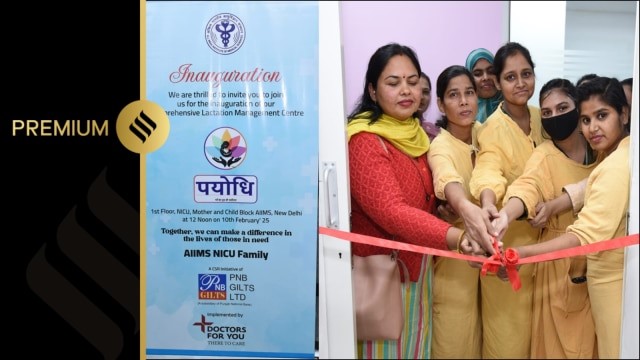
- 07 Mar 2025
In News:
Payodhi, a human milk bank and lactation management centre at AIIMS, New Delhi, has emerged as a critical facility for premature and critically ill newborns in the Neonatal Intensive Care Unit (NICU). Launched in September 2024, it provides pasteurised donor breast milk to newborns who require it due to medical conditions or where the mother cannot breastfeed.
Objectives:
- Provide Safe and Processed Human Milk: Ensures critically ill or premature infants receive the essential nutrients they need for survival, brain development, and immune system strengthening.
- Support Lactating Mothers: Provides counselling, milk donation, and storage facilities to lactating mothers, helping them contribute to milk banks if they have excess milk or cannot breastfeed.
- Free-of-Cost Service: The milk bank offers these services free of charge, ensuring equitable access to life-saving nutrition for vulnerable newborns.
- Global Standards: Payodhi follows guidelines set by the World Health Organization (WHO) and the Government of India on infant nutrition.
Significance:
- Lifesaving Nutrition: The use of donor milk reduces mortality risks in preterm babies, helping to prevent conditions like sepsis, necrotising enterocolitis (NEC), and retinopathy—common complications faced by premature infants.
- Prevents Milk Wastage: By utilising excess milk from donor mothers, Payodhi prevents the wastage of breast milk, which could otherwise be discarded.
- Support for Medical Conditions: The milk bank is crucial for infants whose mothers cannot produce sufficient milk due to medical reasons, such as pulmonary hypertension or those undergoing surgery.
Medical and Health Benefits of Donor Milk:
- Sepsis Reduction: Donor breast milk reduces the risk of sepsis by 19%, compared to formula feeding.
- Reduction in NEC: It significantly lowers the risk of necrotising enterocolitis (NEC) by 79%, a severe infection with a high mortality rate in premature infants.
- Improved Health Outcomes: Early initiation of breast milk within an hour of birth can reduce neonatal deaths by 22%. It also reduces feeding intolerance, vomiting, and shortens NICU stays.
Expansion and Reach:
Payodhi is one of around 90 milk banks in India, contributing to the nationwide effort to reduce neonatal deaths. AIIMS is working to expand its donor pool by reaching out to mothers whose babies have undergone surgery or those whose infants are in long-term NICU care. The milk bank also plans to reach out to working mothers, encouraging them to express and donate excess milk, benefiting both the infants and their own health.
Why Donating Milk is Beneficial:
Donating milk not only helps save newborns but also benefits the donor mothers by stimulating lactation and preventing milk suppression. The act of expressing milk helps maintain milk production, which is essential for the health of both the baby and the mother.
‘One Day as a Scientist’ Initiative
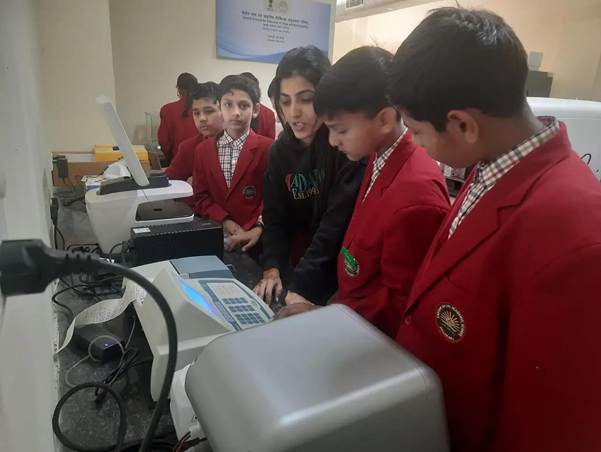
- 07 Mar 2025
In News:
In response to Prime Minister Narendra Modi’s call during his Mann Ki Baat address, the Ministry of Ayush has launched the ‘One Day as a Scientist’ initiative. This program offers students an immersive experience in scientific research, providing them hands-on exposure to advanced laboratory equipment and modern research methodologies. The initiative aims to nurture the scientific temperament among young minds and encourage them to explore the integration of traditional medicine with modern science.
Key Features of the Initiative:
- Hands-on Lab Experience: Students visit Ayush research institutions where they explore cutting-edge scientific tools and technologies, gaining firsthand insight into the research process.
- Mentorship by Experts: Scientists and researchers guide students, offering valuable insights into research methodologies and the potential of Ayush systems in mainstream healthcare.
- Integration of Traditional and Modern Sciences: The initiative emphasizes the role of Ayush therapies, including Ayurveda, Yoga, Naturopathy, and Homeopathy, combined with modern scientific advancements.
- Nationwide Participation: The program is implemented across various institutions such as the National Institute of Ayurveda, Central Council for Research in Homoeopathy (CCRH), and the Central Research Institute for Yoga & Naturopathy (CRIYN), facilitating student engagement in scientific exploration.
Objectives of the Initiative:
- Encouraging Youth Participation: By providing direct exposure to scientific research, the initiative aims to inspire students to pursue careers in research and innovation.
- Bridging the Gap Between Traditional and Modern Medicine: The program focuses on scientifically validating and innovating traditional medicine, making it an integral part of India’s healthcare system.
- Fostering a Scientific Temperament: Students gain a deeper understanding of scientific processes, enhancing their curiosity and critical thinking, key traits for future leaders in research and innovation.
Alignment with National Science Day:
The National Science Day 2025 theme, “Empowering Indian Youth for Global Leadership in Science and Innovation for Viksit Bharat,” aligns perfectly with the goals of this initiative. The program aims to inspire students to become future leaders in science and innovation, contributing to India’s vision of becoming a developed nation.
Aadhaar Governance Portal

- 07 Mar 2025
In News:
The government has introduced the Aadhaar Governance Portal, a new initiative developed by the Ministry of Electronics and Information Technology (MeitY). This platform is designed to streamline the approval process for Aadhaar authentication requests and further enhance citizen services.
Key Features:
- Simplified Authentication Process: The portal offers a step-by-step guide to help both government and private entities apply for Aadhaar authentication. It aims to improve the overall delivery of services, reducing administrative delays.
- Seamless Onboarding: Entities can now access detailed Standard Operating Procedures (SOPs) for onboarding Aadhaar authentication services. The portal serves as a comprehensive resource for entities seeking authentication approval.
- Wide Applications Across Sectors: The portal will be used for Aadhaar authentication in multiple sectors, including healthcare, education, e-commerce, and hospitality. It enables citizens to access essential services with ease.
- Face Authentication: The integration of face authentication in customer-facing applications will allow for anytime, anywhere authentication, enhancing the flexibility and accessibility of services.
Impact on Governance:
This initiative comes as part of the government's broader agenda to support good governance through technology and improve the delivery of welfare services. The new rules, introduced under the Aadhaar Authentication for Good Governance (Social Welfare, Innovation, Knowledge) Rules, 2025, aim to enhance service delivery and simplify processes for both citizens and service providers.
Role of Aadhaar:
Aadhaar, a 12-digit unique identification number, serves as proof of identity linked to an individual’s biometric and demographic information. Launched by UIDAI in 2009, Aadhaar has become integral to the delivery of government services and is now widely used by private entities for identification purposes.
With its ability to ensure verified identities, Aadhaar is crucial for streamlining processes in sectors ranging from welfare distribution to digital banking.
Juanga Tribe
- 06 Mar 2025
In News:
The National Human Rights Commission (NHRC) has sought an Action Taken Report (ATR) from the District Magistrate of Keonjhar, Odisha, over alleged human rights violations concerning the Juanga tribe, a Particularly Vulnerable Tribal Group (PVTG) in the region.
About Juanga Tribe
- One of 13 PVTGs among 62 tribal communities in Odisha.
- Population: ~50,000 (2011 Census).
- Primarily located in Keonjhar and Dhenkanal districts, especially in the Gonsaika hills of Banspal block, Keonjhar.
- Language: Juang, a Munda language of the Austroasiatic family.
- Known for their clan structure, kinship ties, and animistic beliefs blended with Hindu practices. Their sun god is regarded as the supreme deity.
- Traditional livelihood: Initially hunters and gatherers, later adapted to basket-weaving and bartering after forest reserves were declared during British rule.
- Traditional clothing: Women wore leaf girdles; men used small loincloths. Post-contact, they adopted external clothing practices.
Alleged Human Rights Violations
- The petition highlighted lack of basic amenities in 114 Juanga villages:
- Healthcare: Nearest PHC is 15 km away; residents must carry patients on cots. Limited access to Biju Swasthya Kalyan Yojana or National Health Card.
- Infrastructure: Absence of all-weather roads, schools, and safe drinking water.
- Tragic case: Deaths of SuniaJuanga (35), his wife Rashmi (30), and their six-month-old daughter due to lack of timely medical help in Jantari village.
- Social issues: No official records on child marriages, orphans, or other vulnerable groups among the Juangas.
NHRC's Directive
- NHRC asked for a detailed report within four weeks from the district administration.
- The petition also criticized underutilization of the District Mineral Foundation (DMF) funds, despite Keonjhar being one of the top fund-holding districts.
India–Nepal MoU on WASH Sector Cooperation
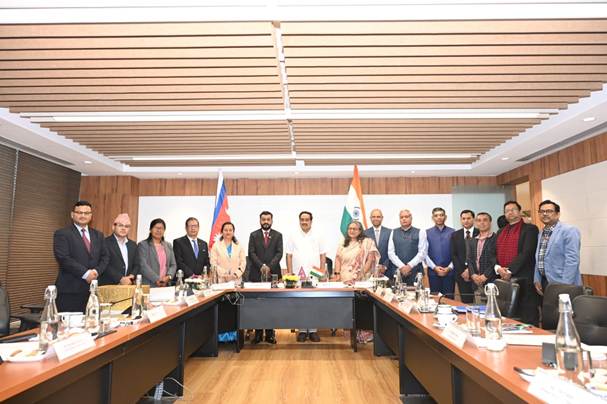
- 06 Mar 2025
In News:
Recently, India and Nepal signed a Memorandum of Understanding (MoU) to strengthen bilateral cooperation in the Water, Sanitation, and Hygiene (WASH) sector, including waste management. The signing ceremony took place at Sushma Swaraj Bhawan, New Delhi.
Key Objectives and Components of the MoU
- Capacity Building: Training programs for Nepali personnel in water resource management.
- Technology and Knowledge Transfer: Exchange of best practices and innovations in WASH.
- Groundwater Management: Joint efforts on:
- Groundwater quality monitoring
- Artificial recharge
- Rainwater harvesting and conservation practices
Strategic Significance
- Promotes regional cooperation and sustainability in public health and water management.
- Nepal seeks to learn from India’s successful initiatives under the Jal Jeevan Mission and Swachh Bharat Abhiyan.
- The agreement includes official visits, site inspections, and regular bilateral meetings to monitor progress.
Sashakt Panchayat-Netri Abhiyan
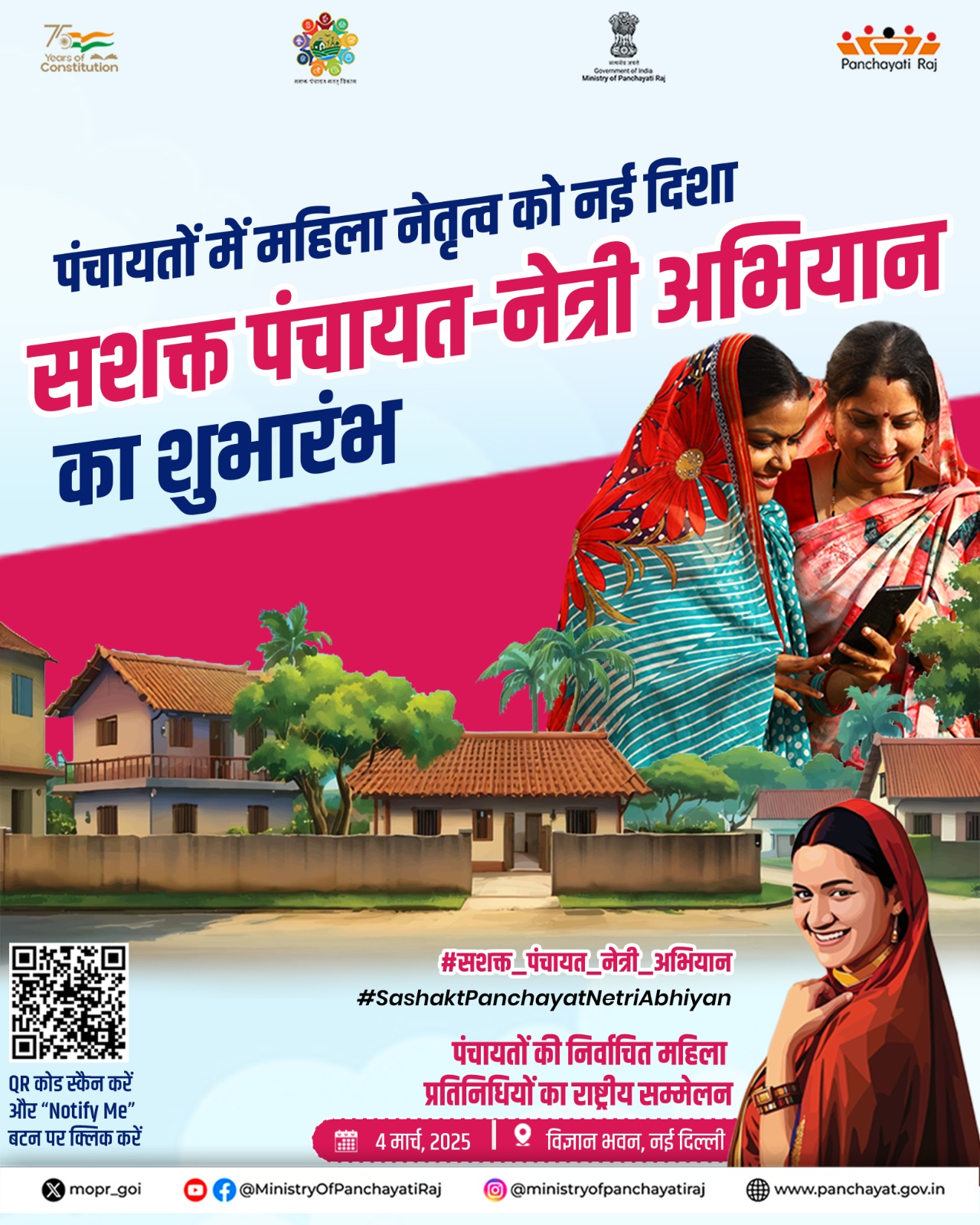
- 06 Mar 2025
In News:
The Ministry of Panchayati Raj launched the “Sashakt Panchayat-Netri Abhiyan” at a National Workshop held in Vigyan Bhawan, New Delhi. The initiative is a significant step toward gender-sensitive governance and enhancing the role of Women Elected Representatives (WERs) in Panchayati Raj Institutions (PRIs).
Key Features of the Initiative
- Objective: Capacity-building of WERs to strengthen their leadership, decision-making, and active participation in local governance.
- Scale: Over 1,200 WERs from across India participated.
- Representation: Women from all three tiers of PRIs took part, marking a first-of-its-kind national gathering.
Model Women-Friendly Gram Panchayats (MWFGPs)
- Launched alongside the Abhiyan.
- Aim: Establish at least one Model Women-Friendly Gram Panchayat in each district.
- Purpose: Promote gender-sensitive, inclusive, and girl-friendly local governance models.
Primer on Gender-Based Violence
- A "Primer on Law Addressing Gender-Based Violence and Harmful Practices" was released.
- Targeted at elected representatives to raise awareness and promote legal literacy regarding women's safety and rights.
Context and Background
- India has over 1.4 million women elected representatives in PRIs.
- Some states, like Bihar, report over 50% representation, surpassing the 33% constitutional mandate.
- The campaign also addresses the elimination of "Sarpanch Pati" culture, emphasizing the independent authority of WERs.
Panel Discussions and Sectoral Themes
- Themes included:
- Women’s participation and leadership in PRIs
- Health, education, safety, digital empowerment, and economic opportunities for women
Cultural Integration and Recognition
- Cultural performances by UNFPA celebrated women’s achievements.
- Outstanding WERs from various states/UTs were felicitated for contributions to rural governance.
Significance
- Aligns with PM Narendra Modi’s “Mann Ki Baat” (119th episode) highlighting Nari Shakti in nation-building.
- Reinforces commitment to inclusive, safe, and socially just Gram Panchayats.
Giloy (Tinosporacordifolia)
- 06 Mar 2025
In News:
Giloy, also known as Guduchi and referred to as Amrita in Sanskrit—meaning the "herb of immortality"—is gaining global attention for its therapeutic potential, with scientific research on the herb witnessing a remarkable surge.
Surge in Scientific Publications
According to PubMed, a globally recognised biomedical database, there has been a 376.5% increase in research publications on Giloy between 2014 and 2024:
- 2014: 243 studies
- 2024: 913 studies
This significant rise reflects growing interest in natural and plant-based therapies, particularly after the COVID-19 pandemic, which intensified focus on immunity boosters and holistic healthcare.
Therapeutic Properties and Uses
- Giloy is used in Ayush systems for:
- Fever management
- Gouty arthritis
- Autoimmune diseases
- Inflammatory disorders
- Cancer therapy (emerging evidence)
- Bioactive compounds in Giloy have shown:
- Immunomodulatoryeffects
- Anti-inflammatoryaction
- Adaptogenicandantiviralproperties
Botanical & Agricultural Features
- Scientific name: Tinosporacordifolia
- Distribution: Widely found across India
- Growth conditions:
- Grows in most soil types
- Propagated via stem cuttings (May–June)
- Large climber with corky, grooved stems
Recent Research Highlights
- Feb 2025 (Gujarat University): Giloy extracts showed promise in HPV-positive cervical cancer treatment through immunomodulation.
- Jan 2025 (Tata Memorial Centre, Mumbai): Giloy-based phytopharmaceuticals were effective in managing Idiopathic Granulomatous Mastitis (IGM), offering a safe, steroid-free, and cost-effective alternative to surgery.
Government Initiatives
- The Ministry of Ayush has launched a technical dossier on Giloy, compiling scientific research and therapeutic insights.
- Aim: Promote evidence-based integration of Ayurveda with modern healthcare systems.
- Emphasis on global collaboration, research funding, and mainstreaming traditional medicine.
Recent ASI Discoveries in Sri Lankamalleswara Wildlife Sanctuary
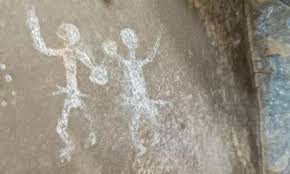
- 06 Mar 2025
In News:
The Archaeological Survey of India (ASI) recently made significant archaeological findings in the Sri Lankamalleswara Wildlife Sanctuary, located in the Kadapa district of Andhra Pradesh. During an epigraphical survey, ASI discovered three rock shelters, rock paintings, and 30 inscriptions, highlighting the region’s historical and cultural significance.
Key Facts:
- Location: Kadapa district, Andhra Pradesh.
- Water bodies:
- The sanctuary forms the catchment area of the Pennar River.
- The Telugu Ganga Canal flows through the eastern part and drains into the Pennar.
Biodiversity:
- Vegetation types:
- Southern tropical dry deciduous forests (hills)
- Scrub forests (plains)
- Southern dry mixed deciduous forests
- Tropical thorn forests
- Tropical dry evergreen forests
- Flora:
- Rare and endangered species: Red Sanders, Sandalwood
- Riparian vegetation: Terminalia spp., Syzygium spp. (Jamun), Wild Mangoes, Anogeissuslatifolia, Phoenix spp., Bamboo, Hardwickiabinata
- Fauna:
- Notable species: Common toad, Bullfrog, Common Indian skink, Green vine snake
- Critically endangered species: Jerdon’s Courser — this sanctuary is the only known habitat of this bird.
World Wildlife Day 2025
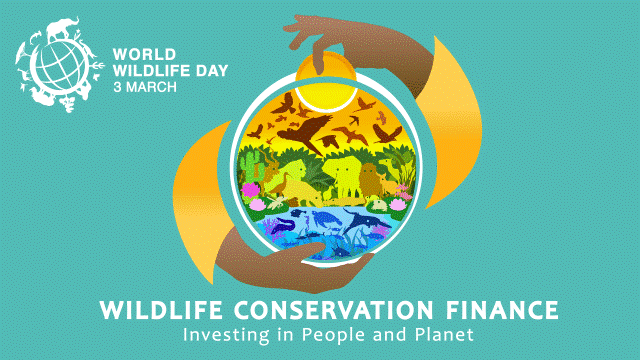
- 05 Mar 2025
In News:
World Wildlife Day is observed on March 3 every year, and in 2025, it will be observed under the theme of “Wildlife Conservation Finance: Investing in People and Planet.”
Key Details:
- Declared by: United Nations General Assembly (UNGA)
- First Observed: 2014
- Occasion: Commemorates the signing of CITES (Convention on International Trade in Endangered Species of Wild Fauna and Flora) in 1973.
- Theme 2025:“Wildlife Conservation Finance: Investing in People and Planet”
Purpose and Significance
World Wildlife Day is an annual UN-recognized global event aimed at:
- Raising awareness about wild fauna and flora.
- Highlighting threats such as climate change, poaching, habitat destruction, and illegal wildlife trade.
- Encouraging global cooperation for wildlife protection.
- Promoting innovative financing models to bridge the estimated $824 billion global biodiversity funding gap.
2025 Theme Focus: Conservation Finance
The 2025 theme calls for sustainable financial strategies, emphasizing:
- Wildlife Conservation Bonds
- Debt-for-Nature Swaps
- Green Bonds and Carbon Credits
- Payments for Ecosystem Services (PES)
- Public-Private Partnerships
These mechanisms aim to support conservation while fostering economic opportunities for local communities.
Timeline of Key Events
- 1973: CITES adopted.
- 2013: UNGA designates March 3 as World Wildlife Day.
- 2014: First official celebration.
- 2021: Theme – Forests and Livelihoods.
- 2025: Theme – Finance for Conservation.
Wildlife Status in India
- Protected Areas: 1,014 total (as of 2024), including:
- 106 National Parks
- 573 Wildlife Sanctuaries
- 115 Conservation Reserves
- 220 Community Reserves
(Covers ~5.32% of India’s total area)
- Tiger Population (2022): 3,682 – ~75% of global wild tigers
- Asiatic Lion Population (2020): ~674 (only in Gujarat's Gir Forest)
- India's Biodiversity Share:
- 7.6% of global mammal species
- 14.7% of amphibians
- 6% of birds and reptiles
- 6% of flowering plants
Major Causes of Wildlife Decline
- Habitat loss & fragmentation
- Illegal wildlife trade and poaching
- Climate change and pollution
- Invasive species
- Industrialization & urban expansion
Conservation Measures in India
- Project Tiger (1973): Boosted tiger numbers significantly.
- Project Elephant (1992): Focuses on elephant corridors and human-wildlife conflict mitigation.
- Wildlife Protection Act (1972): Key legal framework to safeguard endangered species.
- Eco-Sensitive Zones (ESZs): Buffer areas around protected habitats.
- Community Initiatives: Ecotourism, local participation in conservation.
Blue Ghost Mission
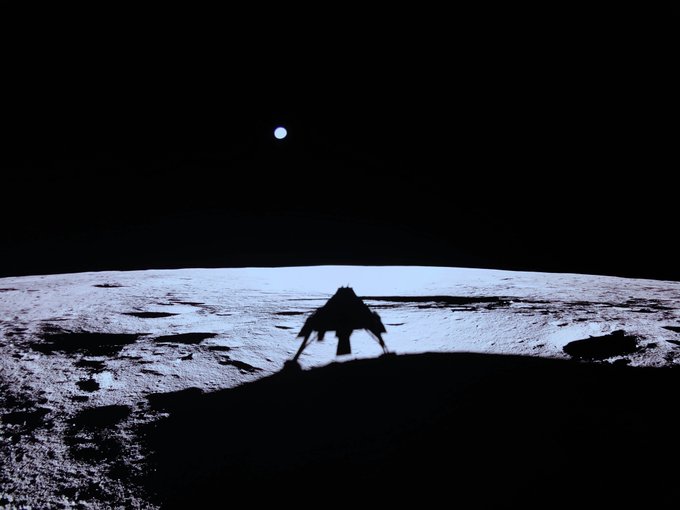
- 05 Mar 2025
In News:
Firefly Aerospace’s Blue Ghost lunar lander successfully achieved a stable, upright landing on the Moon's Mare Crisium region on March 2, 2025, marking it as the second private spacecraft to land on the Moon and the first to do so upright. This mission is a part of NASA’s Commercial Lunar Payload Services (CLPS) initiative.
Key Details of the Blue Ghost Mission
- Developer: Firefly Aerospace, Texas-based private aerospace firm
- Launch Date: January 15, 2025
- Launch Vehicle: SpaceX Falcon 9
- Landing Site: Near Mons Latreille, a volcanic formation in the Mare Crisium
- Descent & Duration: 16-day lunar orbit followed by powered descent; operates for one lunar day (14 Earth days)
Mission Objectives
- Scientific Research:
- Study heat flow from the Moon’s interior to understand its thermal history
- Analyze plume-surface interactions to refine lunar landing techniques
- Collect data on magnetic and electric fields to infer geological evolution
- Conduct X-ray imaging of Earth's magnetosphere
- Examine lunar dust dynamics, particularly its levitation due to solar radiation
- Investigate soil adhesion for improved lunar hardware design
- Technology Demonstration:
- Test radiation-hardened systems
- Evaluate the use of Global Navigation Satellite System (GNSS) signals on the Moon
Payload and Instruments
- Number of Payloads: 10 NASA scientific payloads
- Notable Tools:
- Vacuum device for soil collection
- Subsurface drill measuring temperature up to 3 meters deep
Significant Observations
- Eclipse Imaging: Scheduled to capture a total lunar eclipse (March 14)
- Lunar Sunset: Will image lunar horizon glow during sunset (March 16), a phenomenon first noted during Apollo 17
- Firsts Achieved:
- First commercial lander to land upright on the Moon
- First of three major private lunar missions scheduled in 2025
Relevance for India and the World
- Demonstrates the viability of public-private partnerships in deep space missions
- Advances NASA’s Artemis program by developing cost-effective lunar logistics
- Paves the way for international lunar commerce and exploration
Obesity in India: A Public Health Challenge
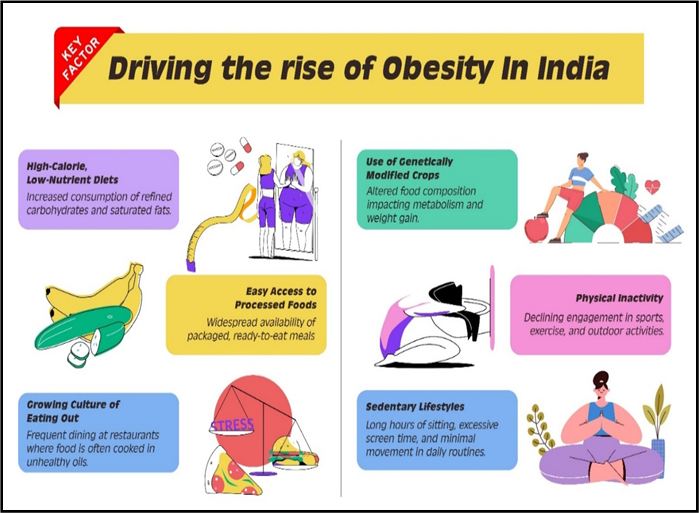
- 05 Mar 2025
In News:
Obesity has emerged as a critical public health issue in India, with rising prevalence across age groups and socio-economic strata. It is a key risk factor for non-communicable diseases (NCDs) like diabetes, cardiovascular diseases, and hypertension. Recognizing its growing burden, the Government of India has adopted a multi-ministerial, community-driven, and policy-integrated strategy to promote healthier lifestyles.
What is Obesity?
- Definition (WHO): Abnormal or excessive fat accumulation that presents a risk to health.
- Measurement: Body Mass Index (BMI = kg/m²)
- Body Mass Index (BMI), previously known as the Quetelet index, is a simple way to check if an adult has a healthy weight. It is calculated by dividing a person's weight in kilograms by their height in meters squared (kg/m²). To find BMI, take a person’s weight (kg) and divide it by their height (m) squared.
- WHO Standard:
- Overweight: BMI ≥ 25
- Obese: BMI ≥ 30
- Indian Criteria (lower threshold):
- Overweight: BMI 23–24.9 kg/m²
- Obese: BMI ≥ 25 kg/m²
- Morbid Obesity: BMI ≥ 35
Prevalence of Obesity
Global Trends (1990–2022):
- Children (5–19 yrs) with obesity: ↑ from 2% to 8%
- Adults with obesity: ↑ from 7% to 16%
India-Specific Data (NFHS-5, 2019–21):
- Overweight/obese: 24% women, 23% men
- Obese (15–49 yrs): 6.4% women, 4.0% men
- Children under 5 (overweight): ↑ from 2.1% (NFHS-4) to 3.4%
Causes of Obesity
- Increased consumption of processed, calorie-dense foods
- Sedentary lifestyle and urbanization
- Reduced physical activity
- Environmental and socio-economic factors
- Excessive use of edible oil, salt, and sugar in Indian diets
Key Government Initiatives to Combat Obesity
1. Ministry of Health and Family Welfare
- NP-NCD (National Programme for Prevention and Control of Non-Communicable Diseases):
- Integrated under Ayushman Bharat Health & Wellness Centres
- Focus: Screening, early diagnosis, IEC/BCC awareness, and NCD clinics
- Facilities: 682 District NCD Clinics, 191 Cardiac Units, 5408 CHC Clinics
2. Ministry of AYUSH
- All India Institute of Ayurveda (AIIA): Specialized treatments (Panchakarma, diet, yoga)
- Ayurswasthya Yojana (2021–22): Funds projects tackling obesity, diabetes, and NCDs
- Research by CCRAS: Validating Ayurvedic lifestyle interventions (Dincharya, Ahara, Yoga)
- Collaboration with CSIR for integrating Ayurveda with modern science
3. Ministry of Women and Child Development
- POSHAN Abhiyaan (2018):
- Focus: Nutrition for children, adolescent girls, pregnant/lactating women
- Mission Saksham Anganwadi &Poshan 2.0 (2021): Combines nutrition, health, wellness
- Use of PoshanVatikas, millet promotion, and fortified food
- Jan Andolan for community-level awareness
4. Ministry of Youth Affairs and Sports
- Fit India Movement (2019):
- Fitness pledges, Fit India School certification, community fitness programs
- Khelo India Programme (2016–17):
- Sports infrastructure and talent development
- Promotes sports culture and active lifestyles in youth
5. Food Safety and Standards Authority of India (FSSAI)
- Eat Right India Movement:
- Supply-Side Reforms:FoSTaC, hygiene ratings, food fortification
- Demand-Side Awareness: Eat Right Schools/Campus, DART Book, Magic Box
- Aaj Se Thoda Kam Campaign: Reduce fat, salt, and sugar intake
- RUCO Initiative: Repurposing Used Cooking Oil into biodiesel
- HFSS Food Labelling: Front-of-pack labels for High Fat, Salt, Sugar foods
Innovative Tools
Tool Description
DART Book Simple home tests for food adulteration
Magic Box 102 school-level food safety experiments
Food Safety on Wheels Mobile food testing & awareness vans
Fit India App Daily fitness tracking and motivation
India’s Way Forward: Towards Amrit Kaal
- Whole-of-government and whole-of-society approach
- Emphasis on lifestyle change, preventive healthcare, and regulation
- Stronger public health infrastructure and education
- Leveraging traditional wellness systems (Ayurveda & Yoga)
- Community empowerment via awareness drives and behavior change
Dramatic Performances Act, 1876
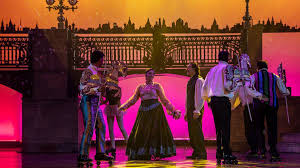
- 05 Mar 2025
In News:
Prime Minister Narendra Modi, at the NXT Conclave, highlighted the Dramatic Performances Act, 1876, as an example of outdated colonial legislation that continued in India long after independence. Though declared unconstitutional in 1956, the Act was formally repealed in 2017 as part of the government's initiative to eliminate obsolete laws and improve ease of doing business.
About the Dramatic Performances Act, 1876
Purpose and Background:
- Enacted by the British colonial government to suppress nationalist sentiments expressed through theatre and performance arts.
- Followed the 1875–76 visit of Prince of Wales (Albert Edward) to India, a period that saw increased resistance against colonial rule.
- Part of a broader strategy alongside other repressive laws such as the Vernacular Press Act (1878) and the Sedition Law (1870).
Key Provisions:
- Wide Banning Powers: Authorities could prohibit any play, pantomime, or public performance deemed seditious, defamatory, scandalous, or obscene.
- Search and Seizure: Magistrates had the authority to raid venues, seize performance materials, and cancel licenses.
- Punishment: Violations could lead to up to 3 months' imprisonment, fines, or both.
- Covered theatre groups, performers, and venues hosting dramatic works.
Post-Independence Status:
Continued Operation:
- Article 372 of the Indian Constitution allowed pre-existing colonial laws to remain valid until repealed or declared unconstitutional.
- The Act was adopted in some states like Madhya Pradesh, Karnataka, Delhi, and Tamil Nadu.
Judicial Rejection:
- In 1956, the Allahabad High Court, in State vs. Baboo Lal &Ors., ruled the Act unconstitutional, citing violation of Article 19(1)(a) (Freedom of Speech and Expression).
- The Court found the Act’s procedural provisions ultra vires and beyond the permissible limits under Article 19(2).
Notable Case:
- In 1953, the Indian People’s Theatre Association (IPTA) attempted to stage ‘Idgah’, based on Munshi Premchand's story.
- The performance was abruptly banned mid-show by the local magistrate. The theatre group defied the order, leading to the court case that triggered the judicial review.
Final Repeal:
- Although unused since 1956, the law remained on the statute books until its formal repeal through the Repealing and Amending (Second) Act, 2017.
- This repeal was part of a larger reform initiative launched by the Modi government in 2014, which has repealed over 2,000 obsolete laws to streamline the legal system and boost administrative efficiency.
Dholavira
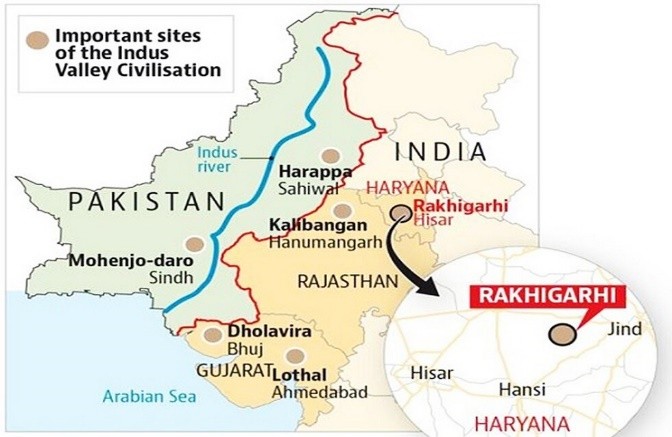
- 05 Mar 2025
In News:
President DroupadiMurmu recently visited Dholavira, a UNESCO World Heritage Site located in Gujarat, India. She expressed appreciation for the Archaeological Survey of India’s (ASI) meticulous conservation efforts to preserve this ancient site, despite its remote location.
Location and Significance:
Dholavira is situated on Khadir Bet Island in the Great Rann of Kutch, Gujarat, within the Kutch Desert Wildlife Sanctuary and along the Tropic of Cancer. It was inscribed as a UNESCO World Heritage Site in 2021 due to its remarkable contributions to understanding the Harappan (Indus Valley) Civilization, one of the world's earliest urban cultures.
Key Features:
- City Layout and Construction:Dholavira is distinct from other Harappan sites in its layout, divided into three main sections: the Citadel, the Middle Town, and the Lower Town. The city is unique for its extensive use of stone in construction, unlike the brick-built cities of Harappa and Mohenjo-Daro. It also featured multi-purpose grounds, including a marketplace and a festive area.
- Water Conservation System:The site is renowned for its sophisticated water management techniques, which included 16 massive reservoirs, stepwells, check dams, and underground water storage systems. This advanced water conservation system earned it the name "Jal Durga" or "Water Fort." The engineering skills of the Harappans, especially in water harvesting, were far ahead of their time and continue to be admired today.
- Trade and Cultural Exchange:Dholavira was a significant trade hub, connected to regions such as Magan (modern Oman) and Mesopotamia. It is believed to have been involved in the trade of copper, jewelry, and timber. The site yielded a variety of artifacts, including terracotta pottery, seals, ornaments, and evidence of metallurgy, along with inscriptions in the Indus Valley script.
- Archaeological Discoveries:The site was first discovered by Jagat Pati Joshi in 1967 and excavated systematically between 1990 and 2005 under Dr. Ravindra Singh Bisht of ASI. It is the fifth-largest site of the Indus Valley Civilization and provides evidence of habitation over seven cultural phases from 3000 to 1500 BCE. Notably, no human remains have been found, but the presence of architectural structures, artifacts, and inscriptions gives a rich understanding of the ancient civilization's culture and economy.
- Technological Advancements:The President, during her visit, highlighted the technological advancements of the Harappans, particularly in urban planning and water management, which were superior in many respects to the technology of modern times.
Historical Context:
The Harappan Civilization, flourishing from around 3300 to 1300 BCE along the Indus River, was an urban society known for its advanced city planning, sanitation systems, and trade networks. Dholavira stands out as a crucial link in understanding the broader scope of this civilization. Other key Harappan sites include Harappa, Mohenjo-Daro, Banawali, Lothal, and Ropar.
Exercise Desert Hunt 2025
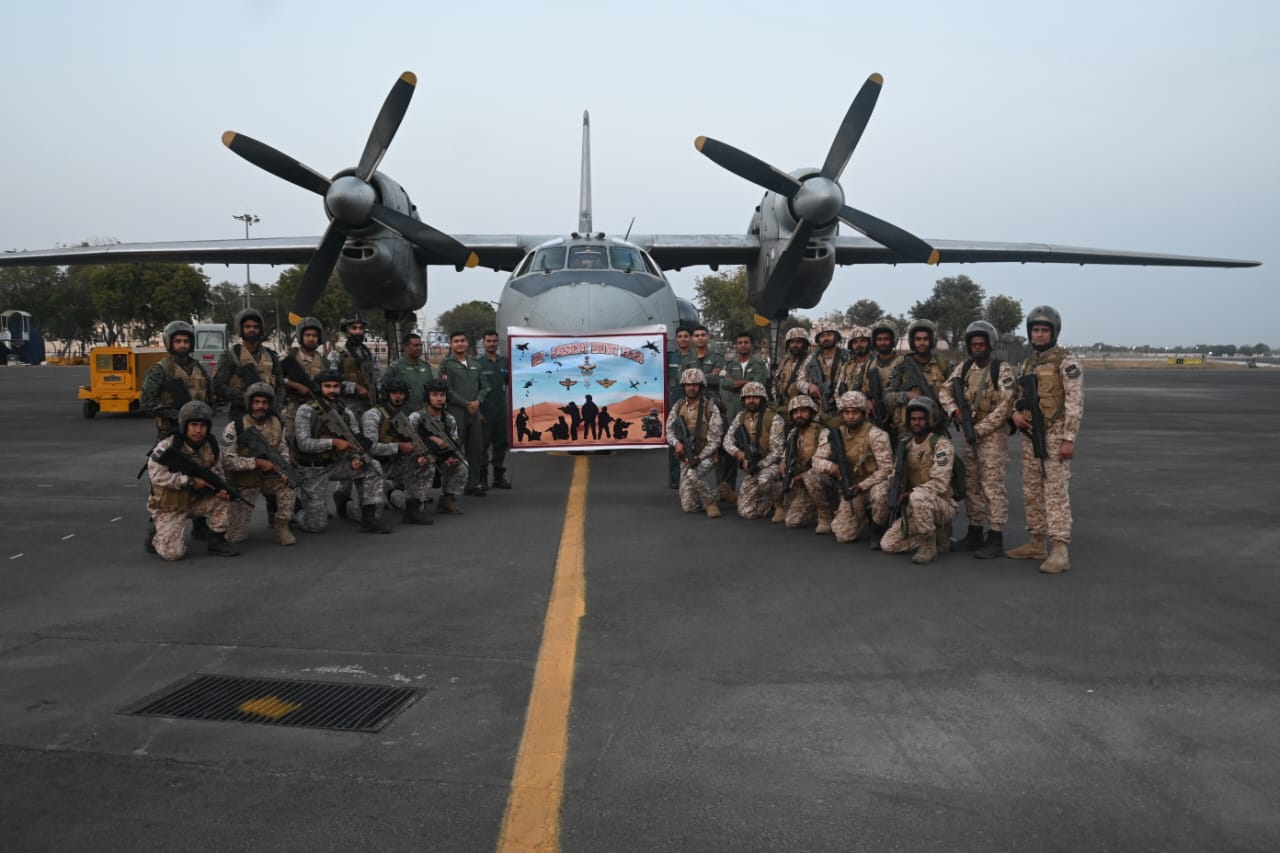
- 04 Mar 2025
In News:
Exercise Desert Hunt 2025 was a high-intensity Tri-Service Special Forces military drill conducted by the Indian Air Force at Air Force Station Jodhpur, Rajasthan, from 24 to 28 February 2025.
Participating Forces
- Indian Army: Para (Special Forces)
- Indian Navy: Marine Commandos (MARCOS)
- Indian Air Force: Garud Special Forces
Objective
- To enhance interoperability, coordination, and operational synergy among the Special Forces of the three services.
- To ensure swift and effective responses to emerging security threats through joint operations.
Key Activities
- Airborne insertion and combat free-fall
- Precision strikes and counter-terrorism drills
- Hostage rescue operations
- Urban warfare simulations
- Validation of joint operational doctrines under realistic combat conditions
Significance
- Strengthens tri-service integration and fosters inter-service cooperation.
- Reinforces the commitment of the Indian Armed Forces to national security.
- Provides a platform for doctrinal validation and operational readiness.
Bond Central
- 04 Mar 2025
In News:
The Securities and Exchange Board of India (SEBI) has launched Bond Central, a centralized and authentic information portal for corporate bonds in India. The initiative aims to enhance transparency, standardize data, and enable informed decision-making in the corporate debt market.
About Bond Central
- Launched by: SEBI (Securities and Exchange Board of India)
- Developed by: Online Bond Platform Providers Association (OBPP Association) in collaboration with Market Infrastructure Institutions (MIIs)—including stock exchanges and depositories
- Operated by: OBPP Association (a not-for-profit entity)
- Accessibility: Free and open to the public
- Purpose: To serve as a centralized, authentic source of information on corporate bonds issued in India
Key Features of Bond Central
- Unified Listings:
- Offers a comprehensive view of corporate bonds across all exchanges and issuers.
- Enhances transparency by allowing investors to compare bond data seamlessly.
- Price Comparison Tool:Enables investors to compare corporate bond prices with Government Securities (G-Secs) and other fixed-income indices, supporting better investment decisions.
- Investor-Centric Information:
- Provides access to risk assessments, disclosures, and corporate bond documentation.
- Helps investors effectively evaluate and compare investment opportunities.
- Standardization & Transparency:
- Standardizes corporate bond-related data to reduce information asymmetry.
- Builds trust in the bond market by ensuring consistency and reliability of information.
Significance for the Market
- Promotes Transparency: Makes vital market data openly accessible.
- Empowers Investors: Facilitates research-based and informed investment decisions.
- Strengthens Market Infrastructure: Aligns with SEBI’s goal of improving market efficiency and trust.
Current Status
- Phase 1 of Bond Central is live as of early 2025.
- More features are to be added progressively based on stakeholder feedback.
Why Mars is Red?
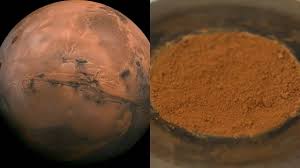
- 04 Mar 2025
In News:
Mars, often called the Red Planet, owes its distinctive hue to the iron-rich mineral ferrihydrite, according to a recent multi-agency study published in Nature Communications. This research offers significant insights into Mars’ ancient climate, the possibility of past water, and the planet’s habitability.
Key Discoveries:
- Primary Cause of Red Color:
- Ferrihydrite, a water-formed iron oxide, has been identified as the main source of Mars’ red dust.
- Previously, hematite—an iron oxide that forms in dry conditions—was believed responsible. The new evidence suggests cooler, water-rich conditions prevailed when ferrihydrite formed.
- Martian dust, dispersed globally by winds, contains ferrihydrite, giving Mars its iconic red appearance.
- Significance of Ferrihydrite:
- It forms only in the presence of liquid water and oxygen, implying that ancient Mars had a more temperate and moist environment.
- Hydrogen bound to ferrihydrite suggests past interactions between water and iron.
- Methodology:
- The study used data from NASA and ESA missions, including:
- Mars Reconnaissance Orbiter
- Mars Express
- Trace Gas Orbiter
- Ground-level data from rovers like Perseverance, Curiosity, and Opportunity
- Lab simulations recreated Martian conditions to study how ferrihydrite interacts with light and other minerals.
- The study used data from NASA and ESA missions, including:
Role of NASA’s Perseverance Rover:
- Launched in 2020, landed in 2021, Perseverance is collecting soil and rock samples.
- These samples will help validate the presence of ferrihydrite and the climatic conditions required for its formation.
Climatic Evolution of Mars:
- Mars once likely supported liquid water and a mild climate, possibly suitable for life.
- Over billions of years, the solar wind stripped away its atmosphere due to the absence of a strong magnetic field.
- This led to a transition to today's cold, dry, and barren landscape.
Facts about Mars:
- Position: 4th planet from the Sun
- Size: Radius ~3,390 km (~half of Earth’s)
- Moons: 2 – Phobos and Deimos (likely captured asteroids)
- Day (Sol): 24.6 hours
- Year: 687 Earth days
- Tilt: 25° (similar to Earth’s 23.4° → seasonal changes)
- Temperature Range: +20°C to -153°C
- Surface Features:
- Olympus Mons: Largest volcano in the solar system
- Valles Marineris: Giant canyon system, 10x longer than Grand Canyon
- Atmosphere: Thin, mostly CO?; lacks global magnetic field
- Dust Storms: Frequent and planet-wide, lasting months
Key Mars Missions:
- NASA: Perseverance, Curiosity, Spirit, Opportunity
- India: Mars Orbiter Mission (Mangalyaan)
- UAE: Hope Mission
- China: Tianwen-1
State of India’s Digital Economy Report 2025

- 04 Mar 2025
In News:
The Indian digital economy is growing twice as fast as the overall economy and is projected to contribute 20% of India’s GDP by 2029, according to the State of India’s Digital Economy (SIDE) 2025 Report released by the Indian Council for Research on International Economic Relations (ICRIER) and its Prosus Centre for Internet and Digital Economy (CIDE).
Key Highlights:
- Global Standing:
- India is the 3rd largest economy globally.
- However, it ranks only 28th in digital user spending, reflecting a significant per capita digital adoption gap.
- In terms of a combined ranking of economic size and digital user economy, India stands 8th globally.
- CHIPS Framework for Digitalisation:The report uses the CHIPS framework to assess digital development:
- Connect: Internet access, affordability, and quality.
- Harness: Usage intensity, fintech adoption.
- Innovate: Start-up ecosystem, AI readiness.
- Protect: Cybersecurity and digital rights.
- Sustain: Green energy investments in the digital sector.
Strengths:
- Harnessing Digital Potential:
- India performs strongly in ICT service exports.
- The Indian IT sector has the third-highest global market capitalisation, after the U.S. and China.
- High levels of fintech usage and a robust start-up ecosystem contribute to digital growth.
- Digital Growth Rate:
- The digital economy is expanding at twice the pace of the broader economy.
Challenges:
- Low Per Capita Spending:Despite high internet penetration, digital service usage and spending are low, particularly among the average user.
- Regional Digital Divide:Southern and Western states are significantly ahead in digital adoption compared to Northern and Eastern states, pointing to the need for region-specific policy support.
- Weakness in Emerging Technologies:
- India ranks 11th in AI research and 16th in AI infrastructure.
- It lags behind countries like the U.S., China, Singapore, South Korea, and the Netherlands in AI and advanced tech innovation.
- Adoption of Consumer IoT and the metaverse remains well below global medians.
Way Forward:
To bridge the digital usage gap and fully harness the potential of the digital economy:
- Policies must focus on increasing affordability, especially in under-served regions.
- There is a need to strengthen AI infrastructure and research.
- Investment in emerging technologies, decentralised finance, and digital skilling is vital.
- A targeted approach to address regional disparities will ensure inclusive digital growth.
HeroRATS and the Future of Tuberculosis Detection
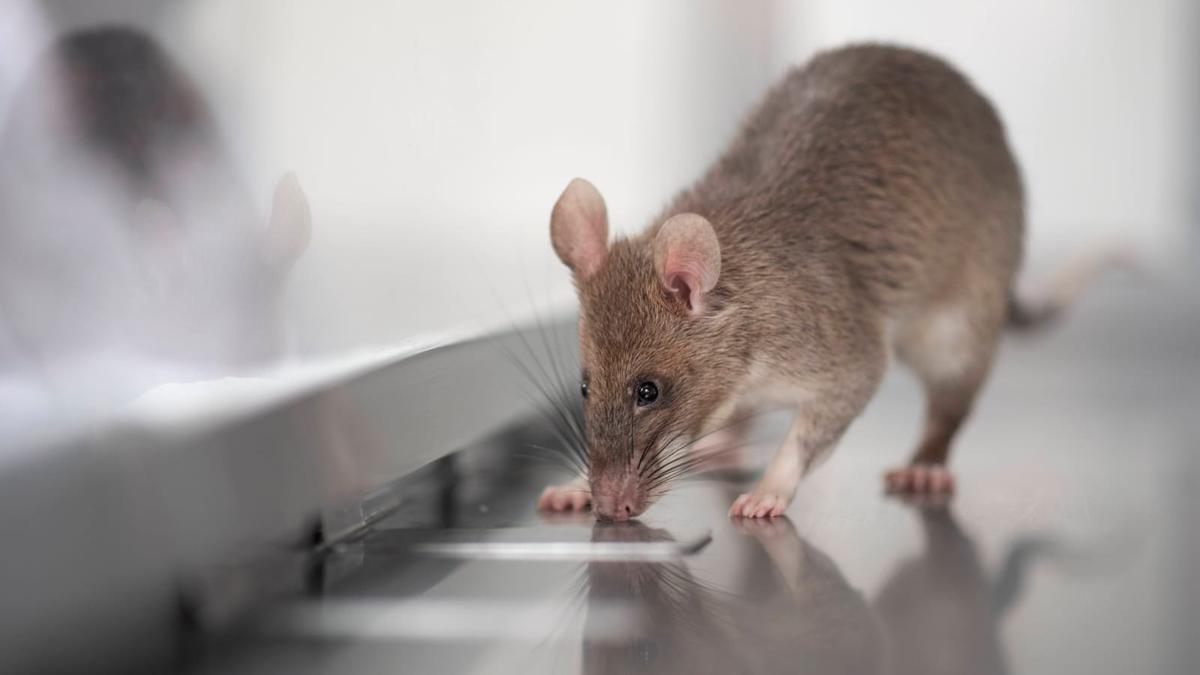
- 04 Mar 2025
In News:
Tuberculosis (TB) remains one of the deadliest infectious diseases globally, with over 10 million new cases annually. India carries the highest TB burden, accounting for about 28% of global cases and recording nearly five lakh TB-related deaths each year—roughly one death every minute. Despite progress under the National Tuberculosis Elimination Programme (NTEP), which aims to eliminate TB by 2025 (ahead of the global 2030 target), early and accurate diagnosis remains a major hurdle, especially in children, low bacillary load cases, and underserved regions.
A Novel Solution: HeroRATS in TB Diagnosis
In a groundbreaking initiative, APOPO, a Tanzanian non-profit, has trained African giant pouched rats (HeroRATS) to detect TB by sniffing sputum samples. These rats have highly sensitive olfactory receptors, enabling them to detect TB cases that conventional diagnostics often miss.
Key Features of HeroRATS:
- Can screen 100 samples in 20 minutes, compared to 3–4 days by sputum-smear microscopy.
- Trained through operant conditioning, rewarded with food after accurate detection.
- Detect twice as many TB cases in children and six times more in low-bacillary-load patients than traditional methods.
- Confirmatory tests: Ziehl-Neelsen and fluorescent microscopy.
A 2023 study involving over 35,000 patients in Tanzania showed that HeroRATS detected over 2,000 additional TB cases, particularly among smear- or Xpert-negative patients. The method offers a fast, cost-effective, and scalable secondary diagnostic tool.
Relevance to India
With India facing challenges like poor health infrastructure in rural areas and reluctance to seek re-testing after a negative result, integrating HeroRATS into the NTEP could boost case detection. Experts suggest a phased rollout in high-burden states like Maharashtra and West Bengal. The Central TB Division’s collaboration with APOPO could help accelerate TB diagnosis and reduce transmission.
About Tuberculosis
- Cause: Mycobacterium tuberculosis, mainly affects the lungs, spread via airborne droplets.
- Prevalence: One-fourth of the global population is infected; only 5–10% show symptoms.
- Risk Factors: Weakened immunity, malnutrition, diabetes, tobacco and alcohol use.
- Diagnosis: WHO recommends rapid molecular tests like Xpert MTB/RIF Ultra.
- Prevention: BCG vaccine at birth.
- Treatment: Standard 4–6 month antibiotic course.
- Drug-Resistant TB:
- MDR-TB: Resistant to isoniazid and rifampicin.
- XDR-TB: Resistant to multiple drug classes, harder to treat.
- TB-HIV Link: HIV patients are 16 times more likely to develop TB.
Bio-detection Beyond Rats: Macrosmatic Species in Medicine
Several animals with heightened olfactory senses are being used in disease detection:
- Dogs: Detect Parkinson’s, cancers, and diabetes using their 125–300 million olfactory receptors and Jacobson’s organ.
- Ants: Trained to detect cancer cells within three days using chemical signals.
- Honeybees: Can differentiate between types of lung cancer with 88% accuracy using synthetic biomarkers.
MISHTI Scheme
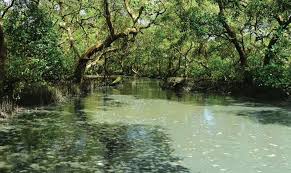
- 03 Mar 2025
In News:
Gujarat has emerged as the national leader in mangrove afforestation, covering 19,020 hectares in just two years under the Centre’s ‘MISHTI’ scheme.
Key Highlights:
- The Mangrove Initiative for Shoreline Habitats and Tangible Incomes (MISHTI) scheme was launched in 2023 under the Union Budget for 2023-24.
- The scheme aims to restore degraded mangrove ecosystems and increase India’s mangrove cover, enhancing coastal resilience while fostering sustainable livelihoods for coastal communities.
- Implemented from 2023 to 2028, the scheme is funded through various channels, including the CAMPA Fund (Compensatory Afforestation Fund Management and Planning Authority), MGNREGS (Mahatma Gandhi National Rural Employment Guarantee Scheme), and other governmental and private funding sources.
- The initiative also supports India’s participation in the global Mangrove Alliance for Climate (MAC) launched at COP27.
Key Objectives of MISHTI
- Ecological Restoration: To restore degraded mangrove ecosystems and expand mangrove cover across coastal areas.
- Coastal Resilience: To strengthen coastal resilience against climate change, such as coastal erosion and rising sea levels.
- Livelihood Generation: To promote ecotourism, sustainable livelihoods, and fishing opportunities for coastal communities.
- Climate Change Mitigation: The scheme plays a crucial role in protecting shorelines from storms, supporting India's commitments under the Paris Agreement and the UN Sustainable Development Goals (SDGs).
Gujarat’s Role in MISHTI Scheme
- Gujarat has emerged as the national leader in mangrove afforestation under the MISHTI scheme, planting over 19,000 hectares of mangroves in just two years.
- The state is spearheading the mangrove expansion efforts, with its coastline covering diverse ecosystems such as mangroves, coral reefs, and seagrasses.
- Gujarat has surpassed the Central Government’s target of planting 540 sq. km of mangroves in five years, completing plantation across 190 sq. km in the initial two years of the scheme.
Mangrove Distribution in Gujarat
- Gujarat's mangrove cover is distributed strategically across different coastal regions:
- Kutch: 799 sq. km, including the Gulf of Kutch, home to the Marine National Park and Wildlife Sanctuary.
- Other Coastal Districts: Jamnagar, Rajkot (Morbi), Porbandar, DevbhoomiDwarka (236 sq. km).
- Central and Southern Belt: Includes Bhavnagar, Ahmedabad, Anand, Bharuch, Surat, Navsari, and Valsad, covering 134 sq. km, with important areas like the Gulf of Khambhat and Dumas-Ubhrat.
- Saurashtra Region: Amreli, Junagadh, and Gir-Somnath maintain 6 sq. km of mangrove cover.
Significance of Mangroves
- Erosion Prevention: Mangroves act as a natural barrier, protecting coastal regions from erosion caused by waves and storms.
- Biodiversity Support: They provide vital breeding grounds for fish and other marine species, supporting coastal livelihoods.
- Climate Resilience: Mangroves help mitigate the effects of climate change by shielding vulnerable coastal communities from cyclones, reducing salinity, and preserving agricultural lands.
Global and National Mangrove Status
- Global Mangrove Distribution: Mangroves are found in tropical and subtropical regions worldwide, providing critical ecosystem services.
- India’s Mangrove Cover: According to the India State of Forest Report 2023, India has a total mangrove cover of 4,991.68 km², which accounts for 15% of the country’s total geographical area. The MISHTI scheme plays a pivotal role in further expanding this cover.
Amir Khusrau
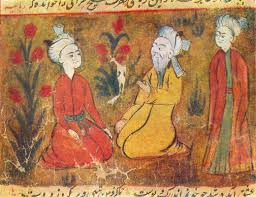
- 03 Mar 2025
In News:
In his address to the 25th edition of Jahan-e-Khusrau at New Delhi’s Sunder Nursery, Prime Minister Narendra Modi described the annual music festival that commemorates the Sufi poet-musician Amir Khusrau as imbued with the “fragrance of the soil of Hindustan”.
Introduction
- Amir Khusrau, a 13th-century poet, musician, and scholar, is a prominent figure in India’s cultural history.
- Known as Tuti-yi-Hind (the Parrot of India), Khusrau’s contributions spanned literature, music, and the Sufi spiritual tradition.
- Revered for his role in shaping India’s syncretic culture, blending Persian, Turkic, and Indian elements.
Early Life and Background
- Born in 1253 in Patiyali, Uttar Pradesh, to a Turkic father and Indian Muslim mother.
- His family migrated to India due to Mongol invasions of Transoxiana.
- Grew up under the patronage of the Delhi Sultanate, serving five rulers: MuizuddinQaiqabad, JalaluddinKhalji, AlauddinKhalji, Qutbuddin Mubarak Shah, and GhiyasuddinTughlaq.
Literary Contributions
- Wrote in Persian and Hindavi, blending Turkic, Persian, and Indian traditions.
- Contributed significantly to the development of Hindavi, the precursor to modern Hindi and Urdu.
- Works include Divans (poetry collections), Mathnawis (narrative poems), and treatises.
- Advocated for Hindu-Muslim unity, promoting syncretic culture (Ganga-JamuniTehzeeb).
- Known for writing riddles, proverbs, and playful verses, which made literature accessible to the common people.
- Praised Hindu philosophical thought in his works, such as MasnaviNuhSiphir.
Musical Contributions
- Credited with creating several ragas, developing khayal (a classical Hindustani music form), and tarana (rhythmic vocal composition).
- Played a significant role in popularizing qawwali, a devotional Sufi music genre, by blending Persian, Arabic, and Indian musical traditions.
- Believed to have invented the sitar and tabla, though evidence is debated.
- Famous qawwalis include ChhaapTilak, Zehal-e-Maskeen, and Sakal Ban PhoolRahiSarson.
Role in the Delhi Sultanate
- Served as a court poet for at least five Delhi Sultans over five decades, a testament to his literary excellence.
- His compositions were vital in enhancing the Sultan’s political and cultural legitimacy.
- Sultan JalaluddinKhalji bestowed upon him the title Amir in recognition of his contributions to poetry.
Spiritual and Sufi Influence
- A devoted disciple of the Chishti Sufi saint NizamuddinAuliya, whose teachings on love and devotion to God deeply influenced Khusrau’s poetry and music.
- Balanced his role as a court poet with devotion to the Sufi order, bridging the worlds of royal courts and spiritual practices.
- His deep spiritual connection to NizamuddinAuliya is immortalized by their shared burial site in Delhi.
Sufism in India
- Sufism is the mystical and spiritual dimension of Islam, emphasizing love, devotion, and inner purification.
- Sufism emerged as a reaction to the rigidity of institutionalized religion and developed alongside India’s Bhakti movement.
- Key Sufi Orders in India:
- Chishti Order: The most influential in India, founded by KhwajaMoinuddin Chishti, focusing on love, devotion, and harmony.
- Suhrawardi Order: Focused on combining religious knowledge with mysticism.
- Naqshbandi Order: Opposed innovations like musical recitals and pilgrimages.
- Rishi Order: Based in Kashmir, drawing from the Shaivite bhakti tradition.
Impact of Sufism in India
- Sufism promoted religious tolerance, social reform, and a deep connection to spirituality.
- It attracted marginalized communities and weakened caste hierarchies.
- Sufi shrines and dargahs became pilgrimage sites for spiritual blessings.
- Influenced Indian music (especially qawwali) and literature, with poets like Bulleh Shah and Sultan Bahu.
- Promoted Sulh-e-Kul (peace with all), a concept that influenced Akbar’s religious tolerance policies.
Khusrau’s Lasting Legacy
- Amir Khusrau’s influence extends across literature, music, and spirituality in India.
- His poetry and music are celebrated today in both sacred and secular contexts.
- His works laid the foundation for the development of Urdu and Hindi literature.
- Khusrau’s teachings on Hindu-Muslim unity and cultural synthesis remain relevant in contemporary India.
Agritourism in Himachal Pradesh
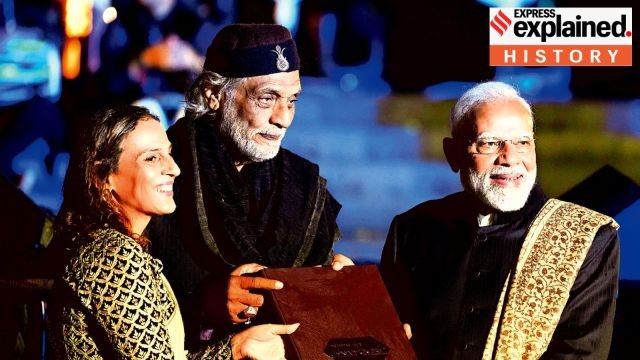
- 03 Mar 2025
In News:
With a public debt exceeding ?1 lakh crore, Himachal Pradesh (HP) is actively exploring sustainable and innovative ways to boost its economy. Tourism contributes around 7% to the state's GDP, and the state is now integrating agriculture with tourism through agritourism to enhance rural livelihoods and extend tourist engagement.
What is Agritourism?
Agritourism is a form of tourism where visitors are engaged in agricultural activities such as farm stays, crop tours, and interactive farming experiences. It provides farmers with additional income, promotes sustainable tourism, and preserves agricultural and cultural heritage.
Opportunities and Features in Himachal Pradesh
Crop and Farm-Based Tourism
- Tulip farming in Kangra has already attracted tourist interest.
- Scope for cultivation of high-value crops like saffron and Himalayan medicinal herbs.
- Promotion of nutraceutical farming to tap into the growing demand for preventive health-based tourism.
Educational Tourism
- Farm visits can be organized for school and college students to raise awareness about food systems and sustainability.
- Farmers can charge nominal fees, benefiting financially while educating the younger generation.
Cultural and Experiential Engagement
- Local youth can be involved in storytelling, showcasing unique farming practices and regional traditions.
- Farm stays, panchayat-level fairs, and cultural activities (folk music, traditional cuisine) can enrich tourist experiences.
Economic and Employment Benefits
- Diversifies farmer income beyond conventional crops like apples.
- Creates jobs for local guides, cooks, transport providers, and artisans, particularly empowering rural women and youth.
Market Integration
- Organizing crop fairs and displaying agricultural products in urban spaces (e.g., malls) can help secure pre-orders and boost local brands.
- Encourages direct farmer-consumer connections.
Environmental and Social Impact
- Promotes organic farming, eco-friendly practices, and water conservation.
- Builds social capital by fostering urban-rural understanding and collaboration.
- Requires visitor sensitization and capacity building among locals to ensure respectful, responsible tourism.
Learning from Other States
- Maharashtra: First state to promote agritourism (Agro-Tourism Development Corporation, 2005); successful models include Baramati's pilot farm and Nashik’s vineyards.
- Kerala: Agro-Tourism Network for spice cultivation experiences.
- Sikkim: Organic farming tourism in the first organic state of India.
- Punjab, Rajasthan, Gujarat, Bihar, NE States: Promote local heritage, farming traditions, and eco-tourism (e.g., Ziro Valley’s wet rice farming, Amul’s dairy tourism).
Policy and Government Support
- Swadesh Darshan Scheme: Develops thematic rural and tribal tourism circuits.
- DekhoApnaDesh: Encourages domestic tourism in lesser-known destinations.
- PMJUGA: Focus on tribal homestays and livelihood promotion.
- National Strategy for Promotion of Rural Homestays (2022): Supports agritourism under Atmanirbhar Bharat.
- Agriculture Infrastructure Fund: Helps build infrastructure and marketing support for farm-based tourism.
Way Forward for Himachal Pradesh
- Develop a dedicated agritourism policy, like Goa’s, focusing on farm diversification and long-term returns.
- Promote public-private partnerships (PPP) for integrated agritourism models in each district.
- Leverage the nutraceutical potential of Himalayan herbs to attract health-conscious visitors.
- Institutionalize farm festivals, crop exhibitions, and story-driven agritourism to diversify Himachal’s tourism landscape.
Naval Anti-Ship Missile – Short Range (NASM-SR)
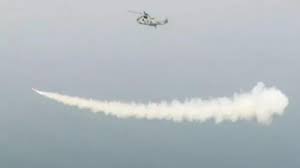
- 03 Mar 2025
In News:
The Defence Research and Development Organisation (DRDO) and the Indian Navy successfully conducted flight trials of the indigenous Naval Anti-Ship Missile – Short Range (NASM-SR) with a ‘Man-in-Loop’ capability from a Seaking 42B naval helicopter at the Integrated Test Range (ITR), Chandipur.
Key Features and Capabilities:
- Man-in-Loop Functionality:
- Provides real-time human intervention during flight.
- Enables in-flight retargeting by transmitting live seeker images to the pilot through a high-bandwidth two-way data link.
- Offers tactical flexibility in selecting and engaging specific targets among multiple options.
- Guidance and Navigation:
- Launched in Bearing-Only Lock-On After Launch (BOLOAL) mode.
- Equipped with an Indigenous Imaging Infra-Red (IIR) Seeker for terminal phase guidance.
- Uses an Indigenous Fiber Optic Gyroscope-based Inertial Navigation System (INS) and a Radio Altimeter for accurate mid-course and low-altitude navigation.
- Design and Control:
- Features Electro-Mechanical Actuators and Jet Vane Control for enhanced maneuverability.
- Integrated avionics module, thermal batteries, and PCB warhead support precise targeting and mission efficiency.
- Stealth and Strike Capability:
- Operates in Sea-Skimming Mode to evade radar detection.
- Demonstrated a direct hit on a small ship target at its maximum range during trial.
- Propulsion:Powered by solid propulsion, featuring an in-line ejectable booster and long-burn sustainer.
Development and Significance:
- Jointly developed by DRDO and the Indian Navy.
- Key DRDO labs involved:
- Research Centre Imarat (RCI)
- Defence Research and Development Laboratory (DRDL)
- High Energy Materials Research Laboratory (HEMRL)
- Terminal Ballistics Research Laboratory (TBRL)
- Marks India’s capability in indigenous anti-ship missile systems with advanced features like man-in-loop control and high-precision targeting.
- Enhances India’s naval warfare and coastal defense capabilities, aligning with Atmanirbhar Bharat in defense manufacturing.
NASA’s Lunar Trailblazer and IM-2 Mission
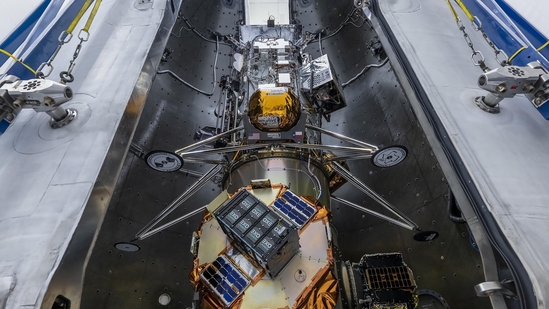
- 03 Mar 2025
In News:
NASA launched the Lunar Trailblazer spacecraft aboard a SpaceX Falcon 9 rocket from Kennedy Space Center to enhance understanding of water distribution on the Moon—crucial for long-term human exploration under the Artemis program.
Lunar Trailblazer Mission:
- Type: Small satellite (orbiter); part of NASA’s Small, Innovative Missions for Planetary Exploration (SIMPLEX) program.
- Developed by: NASA in collaboration with Lockheed Martin.
- Objective:
- Map and analyze the presence of water, particularly in permanently shadowed craters near the Moon’s poles.
- Study the lunar water cycle and evaluate water as a potential resource for future missions.
- Instruments:
- Lunar Thermal Mapper (LTM): Measures surface temperature to track water movement.
- High-resolution Volatiles and Minerals Moon Mapper (HVM3): Detects spectral signatures of water molecules.
- Timeline:
- Fuel-efficient trajectory to reach the Moon in 4 months.
- Mission duration: At least 2 years of mapping operations.
- Significance:
- Supports Artemis program objectives—long-term human presence on the Moon.
- Identifies potential water sources for drinking, fuel, and oxygen.
- Enhances understanding of water on airless planetary bodies and may offer clues to Earth’s water origins.
IM-2 Mission and Intuitive Machines’ Lunar Lander:
- Landing Site:Mons Mouton, near the Moon’s south pole (landing scheduled for March 6).
- Under: NASA’s Commercial Lunar Payload Services (CLPS) and Artemis campaign.
Key Scientific Objectives and Instruments:
- Polar Resources Ice Mining Experiment-1 (PRIME-1):
- TRIDENT Drill: Extracts lunar soil samples.
- MSolo Spectrometer: Detects volatile compounds in samples (e.g., water vapor).
- Laser Retroreflector Array (LRA): Provides a precise, passive reference point for future orbiters using laser ranging.
- Micro Nova Hopper (“Grace”):
- Autonomous drone developed under NASA’s Tipping Point initiative.
- Capable of hopping into shadowed craters to collect and transmit data.
- Nokia Lunar Surface Communications System (LSCS):
- 4G/LTE system for high-definition video, telemetry, and command messaging.
- Supports inter-device connectivity between the lander, rover, and hopper.
Strategic Importance:
- Pioneers in-situ resource utilization (ISRU) demonstrations.
- Tests surface communications and autonomous mobility systems.
- Lays groundwork for sustainable human presence and commercial space infrastructure.
All-India Consumer Price Index for Agricultural and Rural Labourers
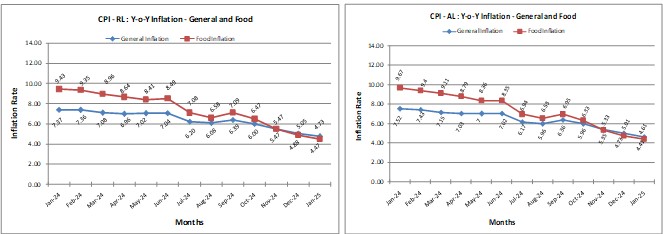
- 02 Mar 2025
In News:
The Labour Bureau, Ministry of Labour& Employment released the All-India Consumer Price Index (CPI) for Agricultural Labourers (CPI-AL) and Rural Labourers (CPI-RL) for January 2025.
Key Highlights:
- Inflation Rates:
- CPI-AL: 4.61%
- CPI-RL: 4.73%
- Marked a decline from January 2024, when rates were 7.52% (CPI-AL) and 7.37% (CPI-RL).
- Also lower than December 2024: 5.01% (CPI-AL) and 5.05% (CPI-RL), indicating easing rural inflation.
- Index Levels:
- CPI-AL: 1316 (down by 4 points from 1320 in December 2024)
- CPI-RL: 1328 (down by 3 points from 1331 in December 2024)
Group-wise Index Comparison (Dec 2024 vs Jan 2025):
Group CPI-AL (Dec → Jan) CPI-RL (Dec → Jan)
General Index 1320 → 1316 1331 → 1328
Food 1262 → 1255 1269 → 1261
Pan, Supari, etc. 2093 → 2103 2100 → 2111
Fuel & Light 1382 → 1390 1372 → 1380
Clothing, Bedding, Footwear 1329 → 1332 1392 → 1396
Miscellaneous 1376 → 1385 1377 → 1385
About CPI-AL and CPI-RL:
- CPI-AL: Measures cost-of-living changes for agricultural labourers; used for revising minimum wages in agriculture.
- CPI-RL: Captures cost-of-living changes for rural labourers (includes CPI-AL as a subset).
- Compiled monthly for 20 states and at the All-India level.
- Base Year: 1986–87=100 (used to measure price change over time).
Significance:
- Declining CPI reflects lower rural price pressure, beneficial for wage policy formulation, poverty analysis, and rural development planning.
Ultra-Conserved Elements (UCEs)
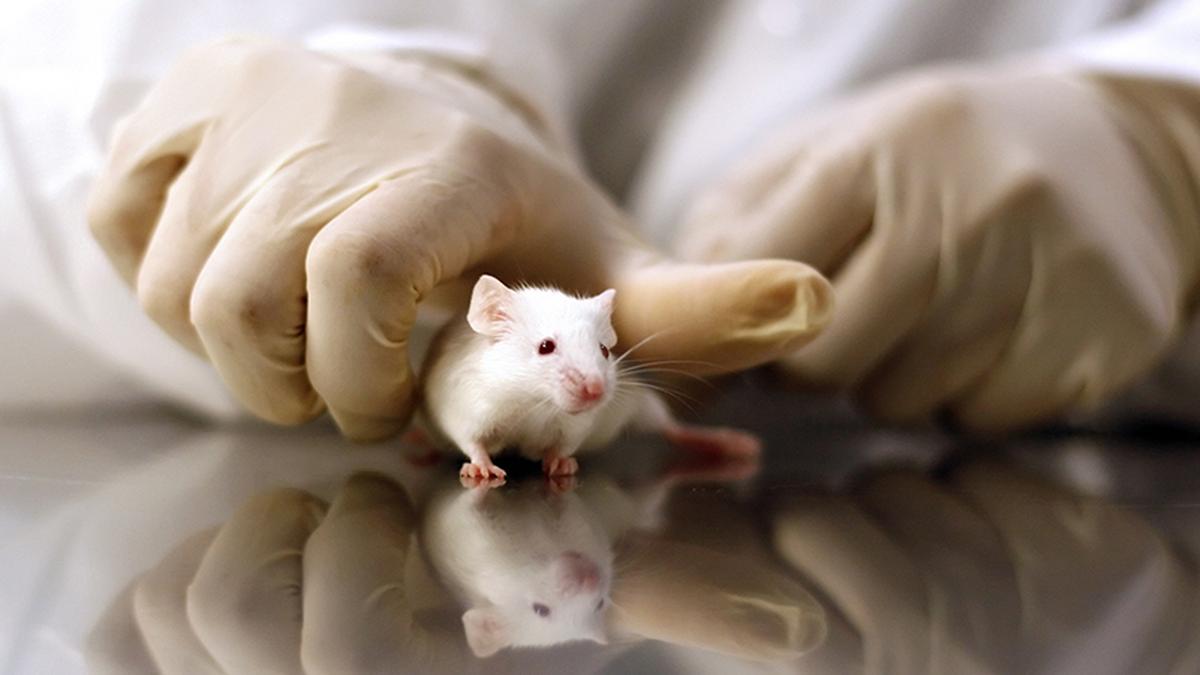
- 02 Mar 2025
In News:
A recent study on the Tra2b gene in mice has revealed a potential reason why certain segments of the genome called Ultra-Conserved Elements (UCEs) have remained unchanged for over 80 million years across species like humans, mice, rats, chickens, and even fish.
What are Ultra-Conserved Elements (UCEs)?
- Definition:DNA sequences at least 200 base pairs long that have remained perfectly identical across diverse species for tens of millions of years.
- Number in Human Genome:Around 500 UCEs have been identified in the human genome.
- Location:Found in both coding regions (genes) and non-coding regulatory regions like enhancers and silencers.
- Species Overlap:Identical UCEs are shared by humans, mice, rats, chickens, and fish, reflecting their evolutionary conservation.
Key Findings from the Tra2b Gene Study
- Research Insight:A UCE embedded in the first intron of the Tra2b gene acts as a “poison exon” to regulate production of the Tra2β protein, which is involved in RNA splicing.
- Mechanism:
- When Tra2β levels rise, the UCE is included as an extra exon in the mRNA.
- This exon contains multiple stop codons, halting protein synthesis.
- The mRNA is then degraded, preventing excess Tra2β protein.
- Experimental Result:
- Deleting this UCE in mouse sperm-producing cells led to overproduction of Tra2β, causing cell death and infertility.
- This implies that any mutation in the UCE that disrupts its function would lead to infertility and thus prevent its transmission, explaining its evolutionary stability.
Significance of UCEs
- Evolutionary Importance:Their intolerance to mutation suggests they are critical for basic survival and reproductive success.
- Functional Role:
- Do not typically code for proteins.
- Regulate gene expression, often during early development, fertility, and immune response.
- Act as enhancers, silencers, or splice regulators (as in the case of poison exons).
- Medical Relevance:
- Help understand gene regulation and disease mechanisms.
- Their conservation across species makes them valuable for comparative genomics and biomedical research.
- Mice are used as model organisms due to ~85% genetic similarity with humans.
Aditya-L1 Mission

- 02 Mar 2025
In News:
ISRO’s Aditya-L1 mission has made a significant breakthrough by capturing the first-ever image of a solar flare 'kernel' using the Solar Ultraviolet Imaging Telescope (SUIT) payload.
Key Highlights:
- Captured Phenomenon:
- An X6.3-class solar flare (among the most intense categories) was observed on February 22, 2024.
- SUIT detected localized brightening in the Near Ultraviolet (NUV) wavelength (200–400 nm), a range never before observed in such detail.
- Scientific Significance:
- Observation occurred in the lower solar atmosphere (photosphere and chromosphere).
- Confirmed energy transmission from the flare through multiple solar atmospheric layers.
- Demonstrated a direct link between flare energy deposition and plasma temperature increase in the solar corona.
- Validated longstanding theories while offering new insights into solar flare physics.
About Aditya-L1 Mission:
- Launch Date: September 2, 2023
- Orbit: Placed in a halo orbit around the first Earth-Sun Lagrange Point (L1) on January 6, 2024.
- Objective: Study solar activities and their impact on space weather.
- Significance: India’s first space-based solar observatory, and ISRO’s second astronomy mission after AstroSat (2015).
Solar Flares – Quick Facts:
- Solar flares are massive explosions on the Sun's surface that release energy, light, and high-speed charged particles.
- Often associated with Coronal Mass Ejections (CMEs) that can affect Earth's magnetosphere and satellites.
- Classification: A, B, C, M, and X — with X-class being the most powerful, increasing tenfold in energy per class.
Amazon’s Ocelot Quantum Chip

- 02 Mar 2025
In News:
Amazon Web Services (AWS) has unveiled its first in-house quantum computing chip, Ocelot, aimed at significantly reducing the development time for commercially viable quantum computers.
Key Highlights:
- Developed By: AWS Center for Quantum Computing at the California Institute of Technology.
- Objective: To accelerate the development of scalable and error-resilient quantum computers using novel architecture.
What is Ocelot?
- Type: Prototype quantum computing chip.
- Technology: Utilizes “cat” qubits—named after Schrödinger’s cat paradox—to suppress certain types of quantum errors intrinsically.
- Efficiency: Achieves 1 logical qubit using only 9 physical qubits, compared to the industry norm of ~1 million physical qubits for similar output.
Technical Features:
- Chip Design:
- Dual silicon microchips (~1 sq. cm each) stacked together.
- 14 core components:
- 5 cat qubits (for data storage),
- 5 buffer circuits (for qubit stabilization),
- 4 ancillary qubits (for error detection).
- Material Used: Standard chip fabrication techniques with tantalum.
Significance:
- Developmental Impact:
- Expected to reduce quantum computer development timelines by 5–10 years.
- Enables building practical quantum systems with around 100,000 qubits instead of the previously assumed 1 million.
- Potential Applications:
- Advanced drug discovery,
- New material development (e.g., batteries),
- Financial modeling, and
- Climate simulations.
- Strategic Implication: Strengthens Amazon’s position in the global quantum computing race alongside rivals like Google, Microsoft, and PsiQuantum.
Understanding Quantum Chips:
- Qubits vs Classical Bits:
- Classical bits = 0 or 1;
- Qubits = 0 and 1 simultaneously (superposition).
- Entanglement:Interlinked qubits can influence each other instantly, enhancing computational capacity.
- Quantum Gates:Operations are performed via gates like Hadamard, CNOT, and Pauli.
- Error Correction:Quantum systems are fragile; Ocelot’s built-in cat qubit architecture enhances stability and reliability.
One Nation-One Port Initiative
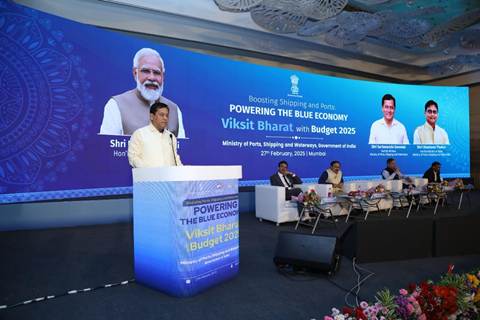
- 02 Mar 2025
In News:
The Ministry of Ports, Shipping and Waterways (MoPSW) has launched the ‘One Nation, One Port Process (ONOP)’, a transformative initiative aimed at standardizing port operations across India to improve efficiency, reduce costs, and bolster India’s position in global trade. This move aligns with PM Gati Shakti, the National Logistics Policy, and India’s ambition to become a leading maritime and logistics hub under Viksit Bharat@2047.
Key Components of the Maritime Reform Package:
1. One Nation, One Port Process (ONOP):
- Seeks uniform documentation and standardized customs procedures across all Indian ports.
- Reduced container operation documents by 33% (from 143 to 96) and bulk cargo documentation by 29% (from 150 to 106).
- Aims to eliminate procedural inconsistencies, boost ease of doing business, and cut logistics delays.
2. Sagar Ankalan – Logistics Port Performance Index (LPPI):
- Evaluates performance of major and non-major ports under Bulk (Dry & Liquid) and Container categories.
- Assesses indicators like cargo handling, turnaround time, berth idle time, and container dwell time.
- Encourages data-driven port benchmarking and fosters transparency in maritime logistics.
- Supports India’s improvement in the World Bank’s LPI (International Shipments) – from rank 44 to 22 in 2023.
3. MAITRI (Master Application for International Trade and Regulatory Interface):
- A digital platform using AI and Blockchain to automate trade clearances and enable Virtual Trade Corridors (VTC).
- Initial linkage with UAE, to expand towards BIMSTEC and ASEAN nations.
- Reduces bureaucratic redundancies, improves supply chain integration, and enhances trade resilience.
4. Bharat Ports Global Consortium:
- A collaborative body combining IPGL (operations), SDCL (finance), and IPRCL (infrastructure).
- Focuses on port development, global trade connectivity, and supporting the Make in India initiative.
- Strengthens India's presence in global logistics networks.
5. Financial and Policy Support:
- Launch of a ?25,000 crore Maritime Development Fund to facilitate long-term port and shipping investments.
- Shipbuilding Financial Assistance Policy 2.0 to aid Indian shipyards in competing globally.
- Customs duty exemptions on shipbuilding inputs extended for 10 years.
- Inclusion of large ships in the Infrastructure Harmonised Master List (HML) to ease access to funding.
6. Sustainability and Green Shipping:
- Launch of the National Centre of Excellence in Green Port and Shipping (NCoEGPS).
- Focus on carbon footprint reduction, cleaner fuels, and eco-friendly port operations.
7. Promotion and Maritime Diplomacy:
- Announcement of India Maritime Week (Oct 27–31, 2025) in Mumbai to showcase India’s Maritime Virasat (Heritage) and Vikaas (Development).
- Will host the 4th Global Maritime India Summit and the 2nd Sagarmanthan Dialogue, with representation from 100 countries and over 1 lakh delegates.
Strategic Significance:
- Aligns with Atmanirbhar Bharat, Blue Economy, and India-Middle East-Europe Economic Corridor (IMEEC).
- Boosts domestic manufacturing and export potential through better port infrastructure and trade facilitation.
- Reflects India’s push toward a digital, green, and globally competitive maritime sector.
Make the World Wear Khadi Campaign
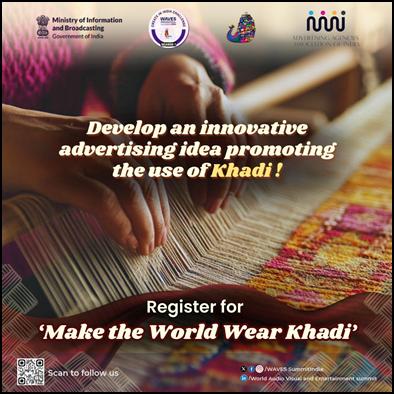
- 01 Mar 2025
In News:
The “Make the World Wear Khadi” campaign is a strategic initiative launched to globalize Khadi, India’s iconic hand-spun fabric, by integrating it with contemporary fashion trends. It is part of the inaugural World Audio Visual & Entertainment Summit (WAVES), scheduled from 1–4 May 2025at theJio World Convention Centre, Mumbai.
Key Highlights:
Organizers
- Advertising Agencies Association of India (AAAI)
- Ministry of Information and Broadcasting, Government of India
Objectives
- Elevate Khadi as a global, aspirational brand.
- Celebrate and modernize India's textile heritage.
- Engage creative professionals in branding and marketing of Khadi through various media.
- Showcase India’s soft power in the global Media & Entertainment (M&E) space.
Campaign Highlights
- Part of the broader Create in India Challenges under WAVES.
- Participants: Open to advertising professionals and freelancers globally.
- Format: Creative entries in digital, print, video, and experiential marketing.
- Total Registrations for Create in India Challenges: 73,000+
- Registrations for Khadi Challenge (as of Feb 15, 2025): 112
Khadi – Key Facts
- What is Khadi?
- A traditional Indian fabric made from hand-spun and hand-woven cotton, silk, or wool.
- Historical Significance:
- Promoted by Mahatma Gandhi during the freedom movement as a symbol of swadeshi, self-reliance, and economic independence.
- Key Characteristics:
- Hand-spun using a charkha (spinning wheel).
- Woven on traditional looms.
- Eco-friendly and sustainable, made from natural fibers.
- Supports rural employment and cottage industries.
WAVES Summit 2025 – Snapshot
- A flagship Media & Entertainment event with a hub-and-spoke model.
- Four thematic pillars:
- Broadcasting & Infotainment
- AVGC-XR (Animation, VFX, Gaming, Comics, Extended Reality)
- Digital Media & Innovation
- Films
- The Khadi campaign falls under the Broadcasting & Infotainment category.
Plastic Parks in India
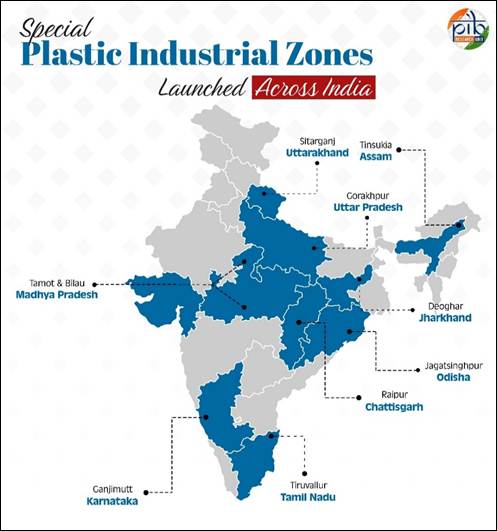
- 01 Mar 2025
In News:
The Department of Chemicals and Petro-Chemicals is implementing the Scheme for Setting up of Plastic Parks under the umbrella scheme of New Scheme of Petrochemicals, to support setting up need-based Plastic Parks, with requisite state-of-the-art infrastructure, enabling common facilities through cluster development approach, to consolidate the capacities of the domestic downstream plastic processing industry.
What is a Plastic Park?
- A Plastic Park is a dedicated industrial zone for plastic-related industries.
- Aims to synergize capacities of the plastic processing sector and promote investment, production, export, and employment.
- Encourages sustainable development through waste management and recycling.
Plastic Parks Scheme
- Implemented by the Department of Chemicals and Petro-Chemicals under the New Scheme of Petrochemicals.
- Financial Support: 50% of project cost, up to ?40 crore per park.
- Focus: Common infrastructure, cluster development, employment generation, and environmental sustainability.
Plastic Parks Approved (as of April 2025):
Location State Year Approved Grant Sanctioned (? crore) Amount Released (? crore)
Tamot Madhya Pradesh 2013 40.00 36.00
Jagatsinghpur Odisha 2013 40.00 36.00
Tinsukia Assam 2014 40.00 35.73
Bilaua Madhya Pradesh 2018 34.36 30.92
Deoghar Jharkhand 2018 33.67 30.30
Tiruvallur Tamil Nadu 2019 40.00 22.00
Sitarganj Uttarakhand 2020 33.93 30.51
Raipur Chhattisgarh 2021 21.04 11.57
Ganjimutt Karnataka 2022 31.38 6.28
Gorakhpur Uttar Pradesh 2022 34.79 19.13
Objectives
- Boost competitiveness, polymer absorption, and value addition.
- Support R&D-led growth and enhance exports.
- Promote eco-friendly practices like plastic recycling, effluent treatment, and hazardous waste management.
- Encourage cluster-based industrial growth.
Process of Setting up
- States submit proposals → In-principle approval by Scheme Steering Committee → Submission of DPR → Final approval.
- Implementation via Special Purpose Vehicles (SPVs) formed by states.
Other Government Measures
13 Centres of Excellence (CoEs) established at premier institutions (IITs, CSIR labs, CIPET) for:
- Sustainable polymers
- Bio-engineered polymer systems
- Advanced polymeric materials
- Wastewater management in petrochemical industries
Skill Development:
- CIPET offers short- and long-term training in plastic processing technology.
Sustainability Measures
- Extended Producer Responsibility (EPR) mandates recycling targets, use of recycled content.
- Hazardous Waste Management Rules enforce safe disposal practices.
- Ban on certain single-use plastics.
- Promotion of circular economy and biodegradable alternatives.
- Active engagement with WTO, UNEP, ISO for global compliance.
India in Global Plastic Trade
- 12th largest plastic exporter globally (World Bank, 2022).
- Exports increased from USD 8.2 million (2014) to USD 27 million (2022).
Prelims Facts to Remember
- Scheme launched under Department of Chemicals and Petrochemicals.
- Max central grant per park = ?40 crore.
- Plastic Park = cluster-based industrial zone for plastic processing industries.
- Gorakhpur (UP) &Ganjimutt (Karnataka) approved in 2022.
- India is actively integrating sustainability and innovation in the plastic sector.
National Science Day 2025
- 01 Mar 2025
In News:
National Science Day to be celebrated with theme ‘Empowering Indian Youth for Global Leadership in Science & Innovation for Viksit Bharat’.
Key Details:
- Observed On: February 28 annually
- Purpose: To commemorate the discovery of the Raman Effect by Sir C.V. Raman in 1928. The day highlights the importance of science and promotes scientific temper among the public.
- Theme 2025:“Empowering Indian Youth for Global Leadership in Science & Innovation for Viksit Bharat”
- This theme reflects the vision of building a developed India (Viksit Bharat) by nurturing youth-led scientific innovation and aligning with India’s S&T ambitions for 2047.
About Sir C.V. Raman and Raman Effect:
- Born: 7 November 1888, Tiruchirappalli, Tamil Nadu
- Major Contributions:
- Discovered the Raman Effect (1928), for which he received the Nobel Prize in Physics in 1930, becoming the first Asian Nobel Laureate in science.
- Founded: Indian Journal of Physics (1926), Indian Academy of Sciences (1934), Raman Research Institute (1948).
- First Indian Director of IISc, Bangalore (1933).
- Awarded Bharat Ratna in 1954.
Raman Effect:A phenomenon where light passing through a substance changes in wavelength due to interaction with molecular vibrations. This principle is used in Raman Spectroscopy, widely applied in material science, chemistry, forensics, and even nuclear waste analysis.
National Science Day – History & Celebrations:
- Established: 1986 by the Government of India
- First Observed: 1987
- Organisedby:National Council for Science & Technology Communication (NCSTC) under the Department of Science & Technology (DST).
- Celebrations include lectures, open labs, science fairs, and awareness drives across the country, especially for students.
Key Developments in Science & Technology (2024-25):
- Innovation & IP Rankings:
- 39th in Global Innovation Index 2024 (WIPO)
- 6th in Global IP Filings
- Major Initiatives:
- Anusandhan National Research Foundation (ANRF): Boosts R&D and supports innovation in EVs, materials, and emerging technologies.
- National Quantum Mission (NQM): ?6003.65 crore mission to advance quantum computing, communication, and sensing.
- National Supercomputing Mission (NSM):
- Deployed 33 supercomputers, capacity: 32 PetaFlops.
- Target: 77 PetaFlops using indigenous technology.
- Artificial Intelligence:
- BharatGen: India’s first multilingual, multimodal Large Language Model (LLM) for Generative AI.
- STEM Inclusivity:
- Programs like WISE-KIRAN support women in science.
- PM Early Career Research Grant nurtures young researchers.
- INSPIRE continues to attract school and college students to science careers.
- Geospatial & Climate Research:
- Expansion of spatial thinking programs in schools (116 schools across 7 states).
- Establishment of 4 Centres of Excellence for climate risk mapping to enhance disaster preparedness.
Cali Fund
- 01 Mar 2025
In News:
‘Cali Fund’ launched at CBD COP16 in Rome to boost biodiversity finance.
Key Details:
- Launched at: COP16 to the UN Convention on Biological Diversity (CBD), held in Rome in 2025.
- Purpose: The Cali Fund aims to promote the fair and equitable sharing of benefits arising from the use of Digital Sequence Information (DSI) on genetic resources, marking a major step towards fulfilling Goal C and Target 13 of the Kunming-Montreal Global Biodiversity Framework (KMGBF)—which targets halting and reversing biodiversity loss by 2030.
Key Features of the Cali Fund:
- Origin: It builds on the multilateral mechanism adopted during COP15 (2022) and was operationalised at COP16 (2025).
- Objective:Mobilise financial contributions from the private sector to support biodiversity conservation and implementation of National Biodiversity Strategies and Action Plans (NBSAPs).
- Hosted By: Multi-Partner Trust Fund Office (MPTFO).
- Managed By: United Nations Development Programme (UNDP) and United Nations Environment Programme (UNEP).
- Secretariat: Hosted by the Convention on Biological Diversity (CBD).
Funding Mechanism:
- Source of Contributions: Companies commercially utilisingDSI—genetic data from plants, animals, and microorganisms—especially in sectors like:
- Pharmaceuticals
- Cosmetics
- Agriculture and biotechnology
- Industrial biotech and AI-assisted research
- Exemptions: Academic institutions, public research bodies, and entities not reliant on DSI are exempt.
- Allocation:
- 50% of resources are earmarked for indigenous peoples and local communities, especially women and youth, recognising their key role in biodiversity protection.
Significance:
- Global First: First UN biodiversity fund to receive direct contributions from private companies.
- Support for Biodiversity Action Plans: Assists developing countries in implementing their KMGBF targets and NBSAPs.
- Boosts Scientific Research: Enhances capabilities for storing, using, and analysing DSI.
- Promotes Collective Action: Encourages industries benefiting from biodiversity to reinvest in its protection—ushering in a new era of biodiversity finance.
About Digital Sequence Information (DSI):
- Definition: Digitally stored genetic data from DNA, RNA, and proteins.
- Use Cases: Vital for research in health, food security, climate change, conservation, and bioeconomy.
- Governance: Discussed under CBD, WHO PIP Framework, UN Law of the Sea, and others.
NASA’s SPHEREx Telescope
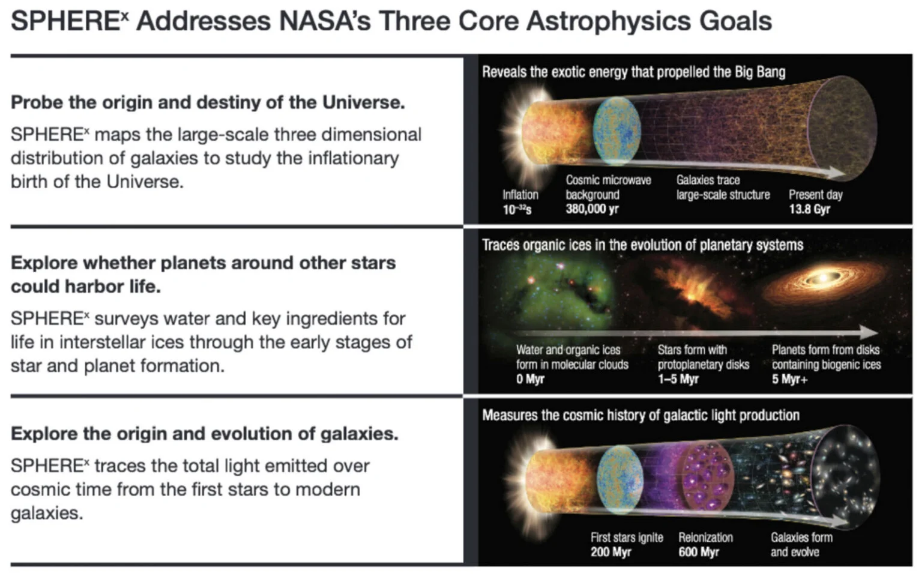
- 01 Mar 2025
In News:
NASA is set to launch the Spectro-Photometer for the History of the Universe, Epoch of Reionization, and Ices Explorer (SPHEREx) aboard a SpaceX Falcon 9 rocket from Vandenberg Space Force Base, California. The telescope is megaphone-shaped, infrared-based, and is designed for a 2-year mission to scan the entire sky in infrared and optical light.
Key Details:
Mission Objectives
- Cosmic Inflation: SPHEREx will investigate the phenomenon of cosmic inflation, the ultra-rapid expansion of the universe that occurred a fraction of a second after the Big Bang (~13.8 billion years ago). By mapping the 3D positions of nearly 450 million galaxies, the mission aims to refine theories about the universe’s earliest moments.
- Spectroscopic Mapping: It will divide light into 96–102 spectral bands, creating a 3D map of the sky. It will collect 8 million spectroscopic images, allowing the study of the composition and distribution of celestial objects on an unprecedented scale.
- Biogenic Molecules Detection: The telescope will identify life-forming (biogenic) molecules like water, carbon dioxide, carbon monoxide, and methanol in cold molecular clouds of the Milky Way. These icy particles are essential for understanding the chemical preconditions for life.
- Cosmic Glow & New Phenomena: SPHEREx will also measure the collective glow from intergalactic space, which could help uncover previously unknown cosmic events and structures.
Comparison with Other Telescopes
Unlike the James Webb Space Telescope (JWST) or the Hubble Space Telescope, which focus on high-resolution, narrow field observations, SPHEREx is designed to scan the entire sky. The full-sky mapping capability makes it a complementary tool for large-scale statistical cosmology.
Significance for Astronomy and Astrobiology
- It provides a comprehensive sky census of galaxies, stars, and asteroids (around 1 billion galaxies, 100 million stars, and 10,000 asteroids).
- By locating regions rich in life-bearing molecules, it enhances our understanding of how life-essential chemistry emerges in the galaxy.
- It lays the groundwork for future targeted studies of exoplanets and habitable environments in space.
Mount Fentale
- 28 Feb 2025
In News:
Mount Fentale, a stratovolcano located in Awash National Park in northern Ethiopia, has recently gained global attention due to its unprecedented release of massive methane plumes. This rare and unusual volcanic event, has raised significant concerns about its potential impacts on climate change and the necessity for better global methane tracking.
About Mount Fentale
Mount Fentale, standing 600 meters above the Rift Valley floor, is known for its elliptical caldera, approximately 6 km in diameter. The volcano's eruptions, historically infrequent, have typically involved the release of lava and ash.
The Methane "Burp" and Its Unusual Nature
What distinguishes this event from typical volcanic activity is the massive emission of methane—58 metric tonnes per hour. Volcanic eruptions are generally associated with carbon dioxide (CO?) and sulfur dioxide (SO?), not methane. Methane, however, is significantly more effective at trapping heat than CO?, being 28 times more potent over a 100-year period. The scale of the methane release is far greater than what is typically associated with volcanic activity, prompting scientific investigations into the cause and potential implications for the global climate.
The methane release is believed to result from deep magma movements that opened underground gas pockets, allowing the methane to escape through newly formed fissures. Unlike a surface eruption, which would involve molten lava, this "burp" suggests that magma at depth caused the gas to surface without the typical visual eruption.
Scientific and Environmental Concerns
Methane is the second-largest contributor to global warming, responsible for around 11% of total greenhouse gas emissions worldwide. Even short-term spikes in methane levels can have a significant impact on global temperature rise. This phenomenon underscores the urgency for enhanced global methane monitoring systems, particularly from natural sources like volcanic eruptions.
While Mount Fentale is not a frequent eruptor, the discovery of massive methane emissions from the volcano highlights the need for comprehensive tracking of both natural and human-driven sources of greenhouse gases. The event suggests that volcanic activity may be a more significant contributor to climate change than previously understood, particularly in the context of methane.
Recent Developments and Earthquake Activity
Following the methane release, Mount Fentale experienced a magnitude 6.0 earthquake the strongest to hit Ethiopia since 1989. This earthquake, likely associated with tectonic movements beneath the volcano, adds a layer of complexity to the ongoing geological activity in the region.
The volcano's stratovolcanic nature, characterized by steep sides built up by alternating layers of lava and pyroclastic material, makes it particularly prone to explosive events. Stratovolcanoes like Fentale are among the most active types of volcanoes on Earth, and their eruptions can have far-reaching environmental impacts.
Global Significance and the Role of Satellite Monitoring
The unexpected methane release from Mount Fentale is not just a local environmental concern but has global implications. As a powerful greenhouse gas, methane's release into the atmosphere accelerates global warming, making it a key target in climate change mitigation efforts. The event highlights the importance of satellite monitoring programs, like those operated by the European Space Agency’s Copernicus program, which detected thermal anomalies in January, and GHGSat, which later confirmed the methane emissions.
The U.S. "Gold Card" Visa

- 28 Feb 2025
In News:
In a significant shift from traditional immigration programs, U.S. President Donald Trump proposed a new immigration initiative—the “Gold Card”—intended to replace the existing EB-5 investor visa program. The Gold Card, requiring a hefty $5 million investment, offers wealthy foreign nationals a direct route to U.S. permanent residency and eventual citizenship, positioning it as a premium alternative to the existing Green Card and EB-5 programs.
Key Differences Between the Gold Card and Green Card
The Green Card remains the standard route to permanent U.S. residency, typically obtained through employment, family sponsorship, or asylum, and involves a detailed, multi-step application process. The EB-5 Investor Visa, introduced in 1990, allows foreign investors to gain U.S. residency by investing a minimum of $1.05 million (or $800,000 in economically distressed areas) in U.S. businesses, provided they create or preserve at least 10 American jobs. The EB-5 program, however, has faced criticism for fraud, misuse, and its association with high-profile real estate projects, including some linked to the Trump family.
The Gold Card, in contrast, offers a simplified and expedited process for wealthy investors to gain permanent residency, bypassing the job creation requirement of the EB-5. For a $5 million investment, foreign nationals can directly purchase their way into U.S. citizenship, bypassing many of the traditional barriers associated with U.S. immigration.
Benefits of the Gold Card Program
- Streamlined Immigration: Investors can gain U.S. residency without the need for job creation or business involvement, unlike the EB-5 program.
- Attracting Wealthy Investors: The program appeals to high-net-worth individuals who can contribute to the U.S. economy through luxury markets, real estate, and business investments.
- Faster Processing: With potentially fewer regulatory hurdles, the Gold Card is designed to have a quicker processing time compared to traditional immigration routes.
- Reduced Fraud Risks: The fixed high-cost nature of the Gold Card may reduce the misuse and fraud that plagued the EB-5 program, offering a more straightforward investment approach.
Potential Concerns and Criticisms
- Ethical and Political Issues: The Gold Card raises questions about "selling" U.S. citizenship, prioritizing wealth over merit, and potentially disadvantaging skilled professionals or individuals seeking to contribute to the U.S. economy.
- Risk of Financial Misuse: Investment-based immigration programs have been criticized for facilitating money laundering, foreign influence, and the movement of illicit capital.
- No Economic Contribution Requirement: Unlike the EB-5, which mandates job creation, the Gold Card does not require any direct investment in U.S. businesses or job creation, limiting its economic impact.
- Legislative and Legal Challenges: Immigration policies in the U.S. are subject to Congressional approval. The Gold Card proposal is likely to face opposition from both Democrats and some Republicans who may object to its perceived elitism or to the legal challenges it might face.
Comparison with Other Investment Visa Programs
The U.S. Gold Card is part of a broader global trend of "Golden Visa" programs, where countries offer residency or citizenship to foreign investors in exchange for significant financial contributions. For instance:
- Portugal: Offers residency for a €500,000 investment in economic development funds, with a pathway to citizenship after five years.
- UAE: Requires an AED 2 million investment for a 10-year residency.
- New Zealand: Offers relaxed requirements for wealthy investors to attract capital following the recession.
These programs, while controversial, aim to attract high-net-worth individuals who can contribute to local economies through investments in real estate, business ventures, or government funds.
India-UK Free Trade Agreement (FTA)
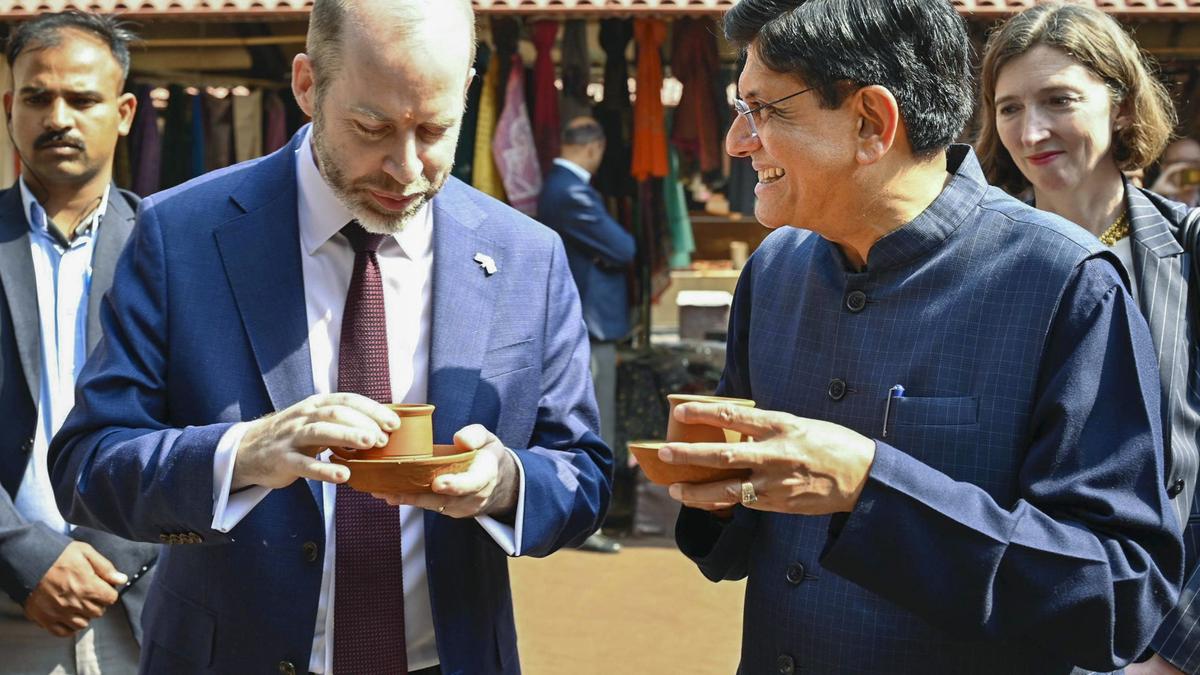
- 28 Feb 2025
In News:
India and the United Kingdom (UK) have resumed negotiations for a Free Trade Agreement (FTA) after an eight-month gap, with the latest round of talks marking the continuation of discussions that began in January 2022. To date, 14 rounds of talks have been held. The FTA aims to strengthen bilateral economic relations by reducing tariff and non-tariff barriers, enhancing market access, and increasing investments between the two nations.
What is a Free Trade Agreement (FTA)?
An FTA is a trade pact between two or more countries that aims to eliminate or reduce import duties on goods traded between them. It also seeks to minimize non-tariff barriers, enhance services trade, and foster investments. By reducing tariffs, FTAs make goods more competitive in foreign markets, which can help boost exports, create jobs, and enhance diplomatic ties.
India’s Trade Strategy and Focus
India has signed 13 FTAs and six preferential trade agreements with various countries and regional blocs, with a recent emphasis on Western nations, particularly the UK, the European Union (EU), and the United States (US). These agreements are part of India’s strategy to diversify its export markets, expand trade, and attract more foreign direct investment (FDI). FTAs with the UK and EU are seen as vital steps in this direction, given the opportunities they present in key sectors such as technology, healthcare, and education.
Key Objectives of the India-UK FTA
The India-UK FTA aims to:
- Boost Trade and Investment: By reducing tariffs and addressing non-tariff barriers, the FTA seeks to facilitate smoother trade between India and the UK.
- Market Access for Services: India is looking to expand its services exports, particularly in sectors like IT, healthcare, and education.
- Enhance Mobility: India aims to secure greater access for students and professionals in the UK, addressing visa and mobility challenges.
- Investment Opportunities: The agreement includes a Bilateral Investment Treaty (BIT), which will safeguard investments and create a more favorable environment for foreign investment.
Benefits of the India-UK FTA
For India, the FTA presents opportunities in both merchandise trade and services:
- Merchandise Trade: India's exports to the UK totaled $12.9 billion in FY24. The FTA is expected to provide tariff reductions on Indian goods, including textiles, apparel, footwear, cars, marine products, and agricultural exports such as grapes and mangoes. These goods currently face relatively low to moderate tariffs in the UK, and the FTA would make them even more competitive.
- Services: Indian sectors like IT, healthcare, and education are poised to benefit significantly from the FTA due to greater market access.
- Investments: The BIT will promote UK investments in India by providing a more stable and transparent investment environment, including mechanisms for dispute resolution.
For the UK, the FTA would reduce high import tariffs on certain goods, making UK products more competitive in the Indian market. Key UK exports such as automobiles, whisky, and machinery, which currently face high tariffs in India, would benefit from reduced duties.
Key Demands and Challenges
While both nations stand to gain from the FTA, several challenges and demands need to be addressed:
- India’s Demands: India seeks greater access for its students and professionals in the UK, alongside more favorable market access for key goods. It also wants to ensure that its domestic industries are protected from a surge in imports, particularly in sensitive sectors.
- UK’s Demands: The UK is pushing for significant cuts in import duties on products like scotch whisky, electric vehicles, and lamb meat. Additionally, the UK seeks improved market access for its services in India, particularly in telecommunications, legal, and financial sectors.
- Dispute Resolution: One of the key areas of negotiation is the dispute resolution mechanism in the BIT. India prefers foreign firms to exhaust local judicial remedies before seeking international arbitration, while the UK has concerns about the efficiency of India’s judicial system.
Sectoral Gains
- Technology: Both countries can collaborate on digital trade, innovation, and technology transfer, fostering mutual growth in the tech sector.
- Green Energy: The FTA could also serve as a platform for enhanced cooperation in renewable energy, aligning with both countries' commitments to climate goals.
- Education and Healthcare: Increased opportunities for educational exchanges and professional mobility in these sectors would enhance bilateral cooperation.
Way Forward
To successfully conclude the FTA, both India and the UK need to:
- Balance Tariff Reductions: Ensure that tariff reductions are fair and that sensitive domestic industries are adequately protected.
- Enhance Market Access: Address concerns related to visa and mobility, ensuring that professionals and students from both countries can benefit from easier movement.
- Finalize Investment Protections: Ensure that the BIT offers clear and mutually beneficial terms for dispute resolution and investment safeguards.
- Strengthen Sector-Specific Cooperation: Focus on areas such as technology, green energy, and digital trade to drive innovation and growth.
PRAKRITI 2025
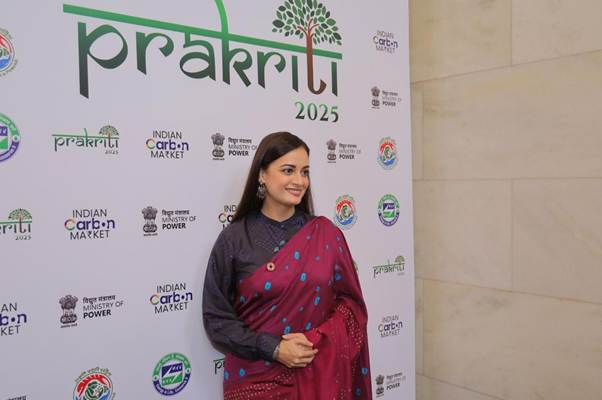
- 28 Feb 2025
In News:
- The International Conference on Carbon Markets – PRAKRITI 2025 was inaugurated by the Minister of Power and Housing and Urban Affairs.
- Organized by the Bureau of Energy Efficiency (BEE) under the Ministry of Power, the event served as a major platform for global dialogue on carbon markets, climate finance, and sustainability strategies.
Key Highlights:
PRAKRITI 2025 (Promoting Resilience, Awareness, Knowledge, and Resources for Integrating Transformational Initiatives) aimed to:
- Understand the functioning of Indian and global carbon markets.
- Discuss challenges, dynamics, and opportunities in carbon trading.
- Strengthen carbon credits, offset mechanisms, and compliance systems.
- Promote renewable energy, green innovations, and ecosystem-based interventions.
- Foster collaboration between governments, industries, and citizens.
Insights from PRAKRITI 2025
- Global Linkages:India’s carbon market will increasingly be influenced by global policies such as the European Union’s Carbon Border Adjustment Mechanism (CBAM), which imposes carbon pricing on imports like steel and aluminium. Indian industries must prepare to maintain competitiveness.
- Carbon Market Mechanisms:
- Under Article 6 of the Paris Agreement, carbon trading allows entities to buy carbon credits to offset emissions.
- Carbon credit = reduction of 1 metric ton of CO? or equivalent GHGs.
- India’s Progress:
- India ranks second globally in Clean Development Mechanism (CDM) project registrations.
- The Perform, Achieve and Trade (PAT) scheme, regulated by BEE, has saved over 106 million tonnes of CO? since 2015.
- Development of a domestic carbon market is a priority to align with global standards and leverage international finance.
- Challenges Highlighted:
- Need for robust Monitoring, Reporting, and Verification (MRV) frameworks.
- Ensuring fair benefit distribution among stakeholders.
- Developing policies tailored to India’s economic and social realities.
- Increasing private sector engagement and incentivizing renewable energy developers.
Bureau of Energy Efficiency (BEE)
- Established: 1 March 2002 under the Energy Conservation Act, 2001.
- Mandate: Develop policies and programmes to promote energy efficiency, coordinate with stakeholders, and promote self-regulation within market principles to reduce India's energy intensity.
- Role in Carbon Market: BEE is the nodal agency regulating India’s carbon trading schemes and energy conservation initiatives.
AI in Indian Agriculture

- 28 Feb 2025
In News:
Microsoft Chairman Satya Nadella recently showcased the transformative impact of Artificial Intelligence (AI) in Indian agriculture through Project Farm Vibes in Baramati, Maharashtra, where AI-driven techniques led to a 40% increase in crop yields while reducing resource consumption significantly.
What is Project Farm Vibes?
Developed by Microsoft Research in collaboration with the Agricultural Development Trust, Baramati, Project Farm Vibes is an open-sourced AI suite aimed at making farming more data-driven, efficient, and sustainable.
Key Technologies:
- Azure Data Manager for Agriculture: Aggregates satellite imagery, weather data, and sensor inputs for a complete view of field conditions.
- FarmVibes.AI: Analyzes soil moisture, temperature, humidity, and pH to offer precise, AI-driven farming recommendations.
- Agripilot.AI: Provides real-time, localized, and personalized farming advice, including in regional languages.
Impact:
- 40% increase in crop production with healthier crops.
- 25% reduction in fertilizer costs through precision spot fertilization.
- 50% decrease in water usage, promoting sustainable irrigation.
- 12% reduction in post-harvest wastage, improving profitability.
- Environmental gains through reduced chemical runoff, soil erosion, deforestation, and greenhouse gas emissions.
How is AI Revolutionizing Indian Agriculture?
- Smart Irrigation:
- AI-based soil and climate analysis optimizes irrigation.
- Schemes like "Per Drop More Crop" are integrating AI with drip and sprinkler systems.
- IoT-driven irrigation systems by ICAR automate water supply based on real-time data.
- Pest and Weed Control:
- The National Pest Surveillance System uses AI to detect pests early and issue real-time alerts.
- AI-enabled computer vision distinguishes between crops and weeds, minimizing herbicide use.
- Economic Impact:
- The AI in agriculture market is projected to grow from USD 1.7 billion (2023) to USD 4.7 billion (2028) at a CAGR of 23.1%.
- Tools like Kisan e-Mitra, an AI chatbot, are improving farmer access to government schemes like PM-Kisan.
Challenges in AI Adoption
- Lack of Awareness: Limited digital literacy in rural areas hampers effective use.
- High Costs: Expensive AI tools like drones and IoT devices are unaffordable for small and marginal farmers (85% of farming community).
- Infrastructure Gaps: Poor internet connectivity; over 25,000 villages lack mobile/internet access.
- Data Issues: AI needs accurate, real-time agricultural data, which is often missing or unreliable.
- Limited Customization: Generic AI models fail to address India's diverse agro-climatic conditions, requiring localized solutions.
Way Forward
- Strengthening Data Frameworks: Utilize platforms like AgriStack and IDEA for integrated farm data management.
- Develop Region-Specific Solutions: Leverage National AI Centres of Excellence to create localized AI applications.
- Improving Digital Infrastructure: Expand PM-WANI and BharatNet to enhance rural connectivity.
- Farmer Skilling and Awareness: Scale initiatives like NeGPA and FutureSkills PRIME for farmer education in digital technologies.
- Financial Support: Promote subsidized loans and investments through the Digital Agriculture Mission (2021-2025) to empower agri-tech startups and farmer cooperatives.
Zagros Mountains and Iraq’s Tectonic Subsidence
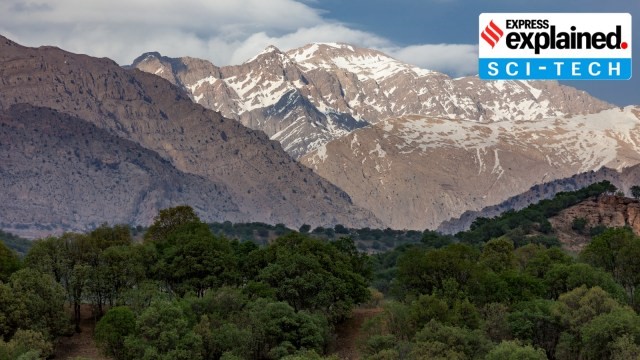
- 27 Feb 2025
In News:
Recent geological studies have found that the hilly region around the Zagros Mountains in northern Iraq is slowly sinking into the Earth, a process attributed to ancient tectonic dynamics. This discovery has implications for earthquake prediction and geothermal energy potential.
Zagros Mountains
- Location: Stretches ~1,500 km from eastern Turkey and northern Iraq across the Iranian Plateau to the Strait of Hormuz.
- Highest Peak: Mount Dena (4,409 m / 14,465 ft).
- Geological Composition: Primarily limestone and shale from the Mesozoic Era and Paleogene Period.
- Climate: Semi-arid temperate – cold winters and dry, arid summers.
- Vegetation: Dominated by oak and pistachio trees with steppe vegetation.
Geological Process Behind Iraq’s Sinking
- The Zagros region is influenced by the tectonic collision between the Arabian and Eurasian Plates.
- A sinking oceanic slab, part of the ancient Neotethys Ocean floor (over 66 million years old), is pulling the region down.
- This slab is subducting beneath the Eurasian Plate, a process occurring over tens of millions of years, making it imperceptible in human timescales.
Research Insights
- The studyused rock records, sediment analysis, and deep-earth imaging to understand the tectonic architecture of the region.
- The findings explain why the depressions around the Zagros Mountains are deeper than the current topography would suggest.
Significance of the Study
- Helps develop precise geological models critical for:
- Earthquake prediction – by understanding fault depths and configurations.
- Geothermal energy exploration – estimating areas with high geothermal gradients.
- Especially relevant in a region prone to seismic activity (e.g., 2023 Turkey-Syria earthquakes).
First Regional Dialogue and ESIC Foundation Day
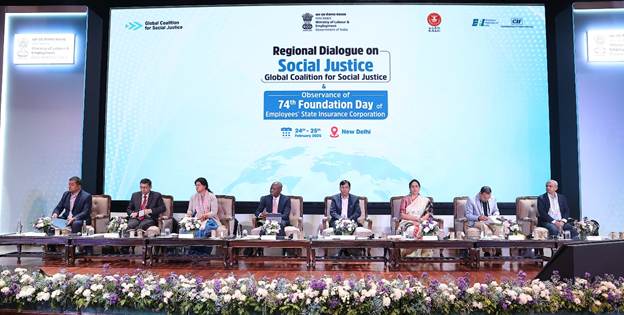
- 27 Feb 2025
In News:
- India hosted the first-ever Regional Dialogue on Social Justice under the Global Coalition for Social Justice in New Delhi (Feb 2025).
- Event coincided with the 74th Foundation Day of Employees’ State Insurance Corporation (ESIC), established in 1952.
Global Coalition for Social Justice (GCSJ)
- Launched by ILO in 2023, GCSJ aims to address social justice deficits globally, aligned with SDGs.
- Membership: Open to governments, businesses, academia; India is a key member.
- Promotes inclusive, sustainable development, responsible business conduct, and labor rights.
- India leads the Asia-Pacific Coordinating Group and spearheads responsible business initiatives.
India’s Achievements in Social Protection
- As per ILO’s World Social Protection Report 2024-26:
- India’s social protection coverage (excluding health) has doubled from 24.4% (2021) to 48.8% (2024).
- India contributed 5% of the global increase in social protection coverage.
- Employability of Indian graduates rose from 33.95% (2013) to 54.81% (2024).
Key Government Initiatives
- e-Shram Mobile App launched to improve access to welfare schemes, curated job listings, and multilingual support.
- Focus on extending coverage to:
- Informal sector (unorganized, gig, platform, construction, agricultural workers).
- Women and youth, with targets like 70% female workforce participation by 2047.
- Emphasis on AI and the Future of Work, living wages, and Global Value Chains through the Decent Work Country Programme.
Constitutional Provisions Supporting Social Justice
Provision
Focus
Preamble
Social, economic, and political justice
Art. 23 & 24
Prohibit trafficking, forced and child labour
Art. 38
Reduce social and economic inequalities
Art. 39 & 39A
Fair wages, legal aid, livelihood opportunities
Art. 46
Promote education and welfare of weaker sections
About Employees’ State Insurance Corporation (ESIC)
- Statutory body under the ESI Act, 1948, Ministry of Labour& Employment.
- Eligibility: Employees earning ≤ ?21,000/month.
- Coverage: Establishments with ≥10 employees (or <10 in hazardous sectors).
- Benefits: Medical care, maternity, sickness, disability, dependent benefits, and unemployment allowance.
Significance of the Dialogue
- Platform for global best practices exchange from countries like Germany, Brazil, Australia, Philippines, and Namibia.
- Showcased India’s leadership in technology-driven social security, gender-responsive policies, and youth skilling.
- Bharatiya Mazdoor Sangh (BMS) and CII-EFI signed a Joint Statement on Responsible Business Conduct.
- Publications released include:
- Best Practices on Responsible Business Conduct
- Compendium on Social Protection in India
- Social Security for Informal Workers
Three-Language Formula and NEP 2020
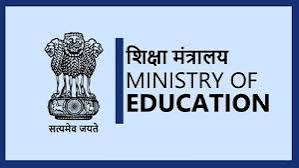
- 27 Feb 2025
In News:
The Three-Language Formula (TLF) under the National Education Policy (NEP) 2020 has sparked controversy, particularly with Tamil Nadu opposing its implementation. The Union government’s withholding of ?573 crore under the Samagra Shiksha Abhiyan (SSA) for non-compliance has intensified the Centre-State standoff.
What is the Three-Language Formula?
- NEP 2020 mandates students learn three languages, of which at least two must be Indian languages.
- States, schools, and students have flexibility to choose the languages, with no imposition from the Centre.
- The medium of instruction should be the home language, mother tongue, or regional language at least until Grade 5, preferably till Grade 8 and beyond.
- Foreign languages like French, German, and Japanese can be offered at the secondary level.
Historical Background:
- Kothari Commission (1964–66) proposed the Three-Language Formula to promote national unity and linguistic diversity.
- Formally adopted in the NPE 1968 under PM Indira Gandhi, reaffirmed in 1986 (Rajiv Gandhi), and revised in 1992 (Narasimha Rao).
- Article 351 of the Constitution mandates the Union to promote the spread of Hindi.
- Tamil Nadu has historically rejected Hindi imposition, favoring a two-language policy (Tamil and English) since CM C.N. Annadurai’s tenure.
Benefits of the Three-Language Formula (UNESCO-backed):
- Improved Learning:
- Multilingual students show better cognitive development and academic performance.
- Education in the mother tongue improves comprehension and parental engagement.
- Social Inclusion:
- Helps include marginalized communities and preserve indigenous languages.
- Promotes unity in diversity and national integration.
- Economic & Environmental Gains:
- Preserves traditional ecological knowledge.
- Example: Switzerland attributes 10% of its GDP to its multilingual heritage.
Challenges and Criticisms:
- Politicization: Language policies can fuel regionalism and identity politics.
- Educational Burden: Students, especially from monolingual or low-literacy households, may struggle with an extra language.
- Infrastructure Gaps: There’s a shortage of trained language teachers.
- Diverse States: Linguistically complex states like Nagaland may face logistical issues.
- Technological Alternatives: Tools like AI translators reduce the need for multilingual proficiency.
Way Forward:
- Focus on quality of education before adding languages.
- Promote cooperative federalism—respecting state autonomy while aligning with NEP goals.
- UNESCO-aligned implementation:
- Use sociolinguistic data for planning.
- Develop learning materials in regional languages.
- Train bilingual teachers.
- Encourage community participation in language education.
Ancient Tea Horse Road
- 27 Feb 2025
In News:
The Tea Horse Road, also known as the Southern Silk Road, was an ancient trade network connecting China, Tibet, and India. It played a pivotal role in economic, cultural, and strategic exchanges between these regions for over a millennium. Though less popular than the Silk Road, it was vital for the tea-horse trade and strategic logistics.
Geography and Route
- Length: Over 2,000 km
- Route Type: Not a single path, but a network of caravan routes
- Regions Covered:
- Originated in Southwest China (Yunnan & Sichuan)
- Passed through Tibet, Nepal, Bhutan
- Extended into India via Himalayan passes, reaching Kalimpong and Kolkata
- Key Nodes:
- Dali & Lijiang (Yunnan): Tea production centers
- Lhasa (Tibet): Central convergence point for trade
- Kalimpong& Kolkata (India): Export destinations to Europe and Asia
- Elevation: Reached up to 10,000 feet in the Himalayas
- Terrain: Extremely challenging — cold, steep, and remote
Historical Evolution
- Tang Dynasty (618–907 CE): Early mentions by Buddhist monk Yijing; trade included sugar, textiles, rice noodles, gold, saffron, and medicinal herbs
- Song Dynasty (960–1279 CE): Institutionalized the tea-for-horse exchange; established official markets for regulated trade
- Mongol Period (13th century): Heightened need for horses for military use against nomadic tribes
- Qing Dynasty's Fall (1912): Political instability weakened trade, but the road was used for global tea exports
- World War II: Gained renewed importance as a logistical route after Japanese blockade of China’s coastline
Tea and Horses – The Core Trade
- Tea: Essential in Tibetan climate; popularized due to practicality and possibly a royal dowry tradition
- Tibetan staple: Yak butter tea
- Pressed tea bricks used as currency in medieval Tibet
- Horses: Sourced from Tibet and Yunnan, vital for China’s cavalry
- Tibetan horses were prized for battles against Mongolian tribes
Decline and Modern Legacy
- Post-1949 (PRC Formation):
- Land reforms and modern infrastructure reduced reliance on traditional portering
- Mechanized transport replaced mule and porter-based systems
- Modern Times:
- Revival through tourism and heritage promotion
- Lijiang declared UNESCO World Heritage Site (1997) for its trade history and cultural legacy
Significance for India-China Relations
- Demonstrates centuries-old economic and cultural exchanges
- Reflects shared heritage through trade, Buddhism, and ethnic interactions
- Ambassador Xu Feihong recently invoked the Tea Horse Road to highlight historical Indo-China links, reinforcing its symbolic role in bilateral diplomacy
HKU5-CoV-2 (Bat Virus)
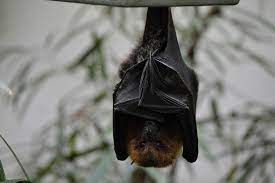
- 27 Feb 2025
In News:
A newly discovered bat coronavirus named HKU5-CoV-2 has been identified in China by a research team led by Shi Zhengli (Wuhan Institute of Virology), known for her work on bat coronaviruses.
About HKU5-CoV-2
- Type: Bat coronavirus
- Subgenus: Merbecovirus
- This group includes MERS-CoV (Middle East Respiratory Syndrome virus).
- Similarity: Shares traits with SARS-CoV-2 (COVID-19 virus).
- Discovery Location: China
Virological Features
- ACE2 Receptor Binding:
- HKU5-CoV-2 can bind to the human ACE2 receptor, the same one used by SARS-CoV-2 for cell entry.
- Binding Affinity: Lower than SARS-CoV-2, indicating weaker infectivity in current form.
- Intermediate Hosts:Can bind to ACE2 receptors in multiple mammalian species → possible spread through intermediate animals (like SARS-CoV and MERS-CoV).
- Laboratory Studies:The virus could infect lab-grown human lung and gut tissues, suggesting potential zoonotic transmission.
- Pandemic Potential:
- No immediate threat of a pandemic.
- Requires ongoing surveillance for possible mutations enhancing transmission.
Transmission Pathways
- Direct Transmission:From bats to humans through contact with bodily fluids (saliva, urine, feces).
- Zoonotic Transmission via Intermediate Host:Could jump species before infecting humans, similar to MERS and SARS-CoV.
Symptoms (Speculative)
- No confirmed human cases so far.
- Possible respiratory symptoms (based on similarity to MERS and COVID-19):
- Fever
- Cough
- Shortness of breath
- Sore throat
- Fatigue
- Body aches
Northern Pintail Duck
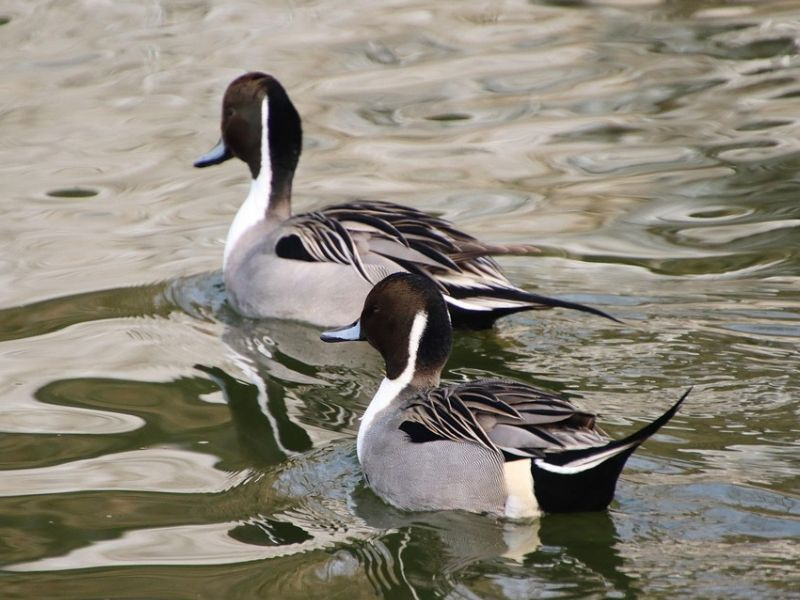
- 26 Feb 2025
In News:
A flock of Northern Pintail ducks was recently sighted at an unprecedented altitude of 13,500 feet in Tawang, Arunachal Pradesh—far above their typical wintering habitats. This rare event has sparked interest in their migration behavior and adaptability to high altitudes.
About Northern Pintail Duck
- Scientific Name:Anas acuta
- Type: Migratory waterfowl known for elegance and long-range migration
- Common Nickname: Northern nomads
Distribution & Migration
- Found across every continent except Antarctica
- Breed in northern regions of Europe, Asia, and North America
- Migrate southward in winter to regions including the Indian subcontinent
- Typically observed in low-lying wetlands; rarely at high altitudes
- Do not breed or reside south of the equator
- Seen in the high-altitude region of Arunachal Pradesh during winter, raising questions about changing migration patterns and climate adaptability
Key Features
- Size: Around 60 cm in length, over 1 kg in weight
- Wingspan: Up to 91 cm
- Speed: Capable of flying at 48 miles per hour due to aerodynamic build
- Male Appearance: Buff-gray body, chocolate-brown head, broad white stripe on chest, black back patterns
- Female Appearance: Mottled brown body, lighter chest and neck
Conservation Status
- Listed as “Least Concern” under the IUCN Red List
- Despite being widespread, their migratory nature warrants regular monitoring to track habitat changes and population health
African-Asian Rural Development Organization (AARDO)
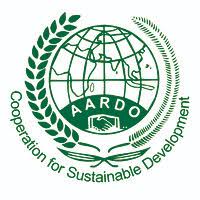
- 26 Feb 2025
In News:
The 21st AARDO Conference recently concluded in New Delhi, reaffirming the commitment to community-led rural development, local knowledge sharing, and South-South cooperation.
About AARDO
- Full Form: African-Asian Rural Development Organization
- Nature: Intergovernmental, autonomous organization
- Established:March 31, 1962
- Headquarters:New Delhi, India
- Origin:
- Conceptualized at the 1955 East Asian Rural Reconstruction Conference (Tokyo)
- Formalized after the 1961 Afro-Asian Conference on Rural Reconstruction (New Delhi)
- Permanent HQ established in 1966 in India
Membership
- Full Members:32 countries from Asia and Africa (e.g., India, Bangladesh, Egypt, Zambia, Malaysia)
- Associate Members:3 entities (e.g., Korea Rural Community Corporation, Agricultural Bank of Sudan)
- Eligibility: Open to Afro-Asian countries that are full or associate members of the UN or its specialized agencies focused on rural development
Observer Status with International Organizations
AARDO has observer status with:
- FAO – Food and Agriculture Organization
- IFAD – International Fund for Agricultural Development
- UNDP – United Nations Development Programme
- UNESCO – United Nations Educational, Scientific and Cultural Organization
- UNCTAD – United Nations Conference on Trade and Development
Objectives & Aims
- South-South Cooperation: Enhance technical and economic collaboration in rural development between Asia and Africa
- Sustainable Rural Development: Promote poverty alleviation, food security, and climate-resilient agriculture
- Capacity Building & Knowledge Sharing: Encourage exchange of best practices, innovations, and research
Functions
- Policy & Dialogue Platform: Facilitates discussions among member countries on rural development strategies
- Training & Capacity Building: Organizes international, regional, and national training programs to strengthen rural institutions
- Research & Action Studies: Initiates and disseminates research on shared challenges in agriculture and rural livelihoods
- Pilot Projects: Offers technical and financial assistance for pilot projects to serve as replicable models
- International Collaboration: Partners with UN agencies, regional bodies, and NGOs for integrated rural development
- Data Sharing: Provides members with disaggregated statistics and information for informed decision-making
Soliga Tribe and Tiger Conservation
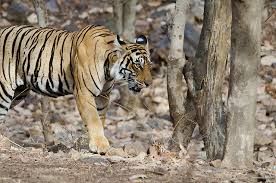
- 26 Feb 2025
In News:
In the 119th edition of Mann Ki Baat, Prime Minister Narendra Modi lauded the Soliga tribe of the BiligiriRanganathaswamy Temple (BRT) Tiger Reserve in Karnataka for their significant role in tiger conservation and sustainable forest practices.
Who are the Soligas?
- Location: Indigenous, forest-dwelling tribe residing primarily in Chamarajanagar district, Karnataka, and parts of Tamil Nadu, especially around Biligiri Rangana Hills and Male Mahadeshwara Hills.
- Meaning of the Name: "Soliga" translates to “children of bamboo”, symbolizing their deep ecological ties.
- Language: They speak Sholaga (a Dravidian language), along with Kannada and Tamil.
- Lifestyle:Soligas live in bamboo-and-mud huts, practice shifting cultivation, and depend on non-timber forest produce (NTFP) for sustenance.
- Diet & Livelihood:Honey is a staple in their diet; they extensively forage and harvest forest produce like amla, gooseberries, and medicinal herbs, leaving a portion for wildlife—a reflection of their conservation ethos.
Religious and Cultural Practices:
- Soligasworship wildlife, especially the tiger, locally called “DoddaNayi” (Great Dog). They have even built temples dedicated to tigers.
- Their belief system includes Hindu customs, animism, and naturism, highlighting their spiritual connection with nature.
- They produce eco-friendly artifacts like ‘jottai’ (leaf cups), showcasing sustainable craftsmanship.
Recognition of Forest Rights:
- In 2011, Soligas became the first tribal community in India to receive legal recognition of their forest rights within a tiger reserve, under the Forest Rights Act (FRA).
- This ruling allowed them to reside within the BRT Tiger Reserve and sustainably collect forest produce without displacing wildlife.
Role in Tiger Conservation:
- Soligas’ traditional knowledge of forest ecology helps them coexist peacefully with wildlife, minimizing human-animal conflict.
- They assist the Forest Department in fire prevention, wildlife tracking, and ecological management.
- Their cultural practices ensure minimal disturbance to wildlife. For instance, during harvest, they intentionally leave 25–33% of the produce in the forest for animals.
BiligiriRanganathaswamy Temple (BRT) Tiger Reserve:
- Location: Chamarajanagar district, Karnataka; lies at the confluence of the Western and Eastern Ghats, forming a critical wildlife corridor.
- Ecosystem: Rich in biodiversity with forest types including:
- Southern Tropical Evergreen
- Semi-Evergreen
- Moist Deciduous
- Flora:Axlewood, Rosewood, Terminalia spp., Indian Gooseberry, Ceylon Oak, Golden Shower Tree.
- Fauna: Tigers, Wild Dogs, Sloth Bears, Sambars, Bison, and endangered species like the Icthyophisghytinosus (Caecilian).
- Cultural Site: Named after Lord Rangaswamy, the reserve houses the Biligiri Temple atop mist-covered hills.
USD-INR Buy/Sell Swap Auction
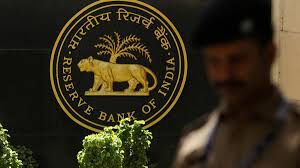
- 26 Feb 2025
In News:
The Reserve Bank of India (RBI) has announced its largest-ever USD-INR Buy/Sell Swap Auction worth $10 billionfor a tenor of three years. This strategic move is aimed at addressing the persistent liquidity deficit in the banking system and stabilizing the Rupee-Dollar exchange rate.
What is a USD-INR Buy/Sell Swap Auction?
A Dollar/Rupee Buy-Sell Swap Auction is a foreign exchange (forex) tool used by RBI to manage domestic liquidity and curb currency volatility. It is a two-leg transaction:
- First Leg (Buy Phase):Banks sell US dollars to the RBI and receive rupee liquidity.
- Reverse Leg (Sell Phase):RBI sells back the same amount of US dollars to banks at a future date (here, after 3 years), along with a swap premium.
Key Features of the February 2025 Swap Auction:
- Auction Size: USD 10 billion
- Tenor: 3 years (long-term)
- Rupee Liquidity Injected: Approx. ?86,000 crore
- Auction Date: 28 February 2025
- Spot Settlement Date: 4 March 2025
- Far-leg Settlement Date: 6 March 2028
- Reference Rate: Based on FBIL (Financial Benchmarks India Pvt Ltd) benchmark
Objectives and Benefits:
- Liquidity Management:
- Addresses durable liquidity needs; helps ease banking system deficit (estimated at ?1.7 lakh crore).
- Supports credit flow to businesses, aiding economic growth.
- Exchange Rate Stability:
- Reduces volatility in the USD/INR rate (expected to stabilize around ?86.30).
- Mitigates pressure from foreign fund outflows.
- Efficient Forex Reserve Utilization:
- Uses RBI’s reserves productively to manage monetary conditions.
- Enhances Policy Transmission:
- Aligns money market interest rates with RBI’s monetary policy stance.
- Supports Inflation Control:
- Infuses liquidity without directly adding to inflationary pressures.
Challenges and Limitations:
- Impact on Forex Reserves:Large-scale swaps temporarily tie up reserves.
- Global Dependencies:Effectiveness may be affected by global interest rate differentials, capital flows, and external shocks.
- Market Speculation Risks:Poor timing or execution could trigger speculative activity in the forex market.
- Temporary Measure:Swap auctions offer short- to medium-term relief; structural reforms are needed for long-term liquidity management.
Bharat Tech Triumph Program (TTP)
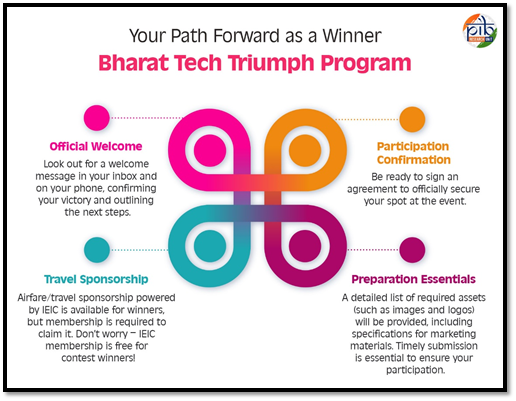
- 26 Feb 2025
In News:
Launched under the Create in India Challenge Season 1, the Bharat Tech Triumph Program (TTP) is a flagship initiative aimed at promoting India’s gaming and interactive entertainment ecosystem on the global stage.
Key Highlights
- Launch Year: 2025
- Ministry Involved: Ministry of Information and Broadcasting (MIB)
- Organizing Partner: Interactive Entertainment and Innovation Council (IEIC)
Objectives:
- Identify and showcase Indian gaming talent internationally.
- Support the growth of the gaming, animation, visual effects, and immersive technology (AR/VR/Metaverse) sectors.
- Boost the 'Create in India' initiative in the media and entertainment domain.
- Enable Indian developers and startups to create globally competitive digital products.
Program Features:
- Eligibility:
Open to developers, studios, startups, and tech companies with working prototypes in:- Game development
- Esports
- Business solutions for gaming ecosystem
- Selection Process:
- Game Submission
- Expert Evaluation – Based on product, pitch, and team viability
- Final Showcase – Winners selected by a jury
Global Exposure Platforms:
- Game Developers Conference (GDC) 2025
- Location: San Francisco
- Dates: March 17–21, 2025
- World Audio Visual Entertainment Summit (WAVES) 2025
- Location: Mumbai
- Dates: May 1–4, 2025
- Venue: Jio World Convention Centre &Jio World Gardens
- Focus Areas: Broadcasting, AVGC-XR, Digital Media, Innovation, and Films
Relevance of WAVES Summit:
- WAVES acts as a global convergence point for the Media & Entertainment (M&E) sector.
- AVGC-XR (Animation, Visual Effects, Gaming, Comics + AR/VR/Metaverse) is a central pillar, aligning with TTP’s goals.
Significance for India:
- Positions India as a global hub for innovation in digital entertainment.
- Supports Atmanirbhar Bharat in the tech and creative economy sectors.
- Encourages cross-border collaborations and export of Indian intellectual property in the gaming domain.
Quality of Public Expenditure (QPE) Index
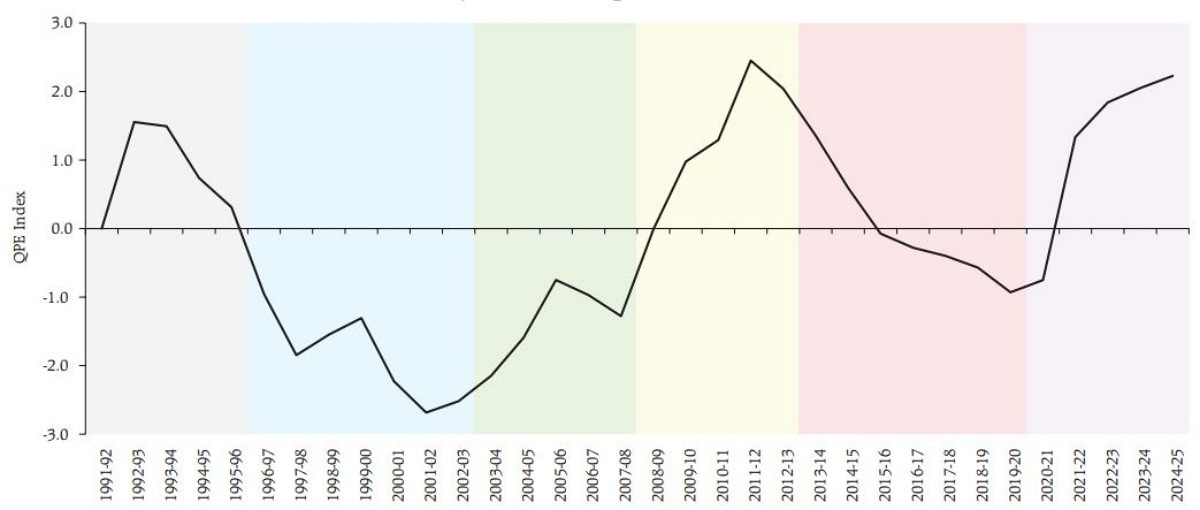
- 25 Feb 2025
In News:
The Quality of Public Expenditure (QPE) Index, developed by the Reserve Bank of India (RBI), measures how efficiently public funds are allocated and utilized by the Central and State governments. Unlike traditional fiscal measures that focus on total expenditure, the QPE Index assesses the composition and developmental impact of government spending, emphasizing long-term economic growth and social development.
Key Components of the QPE Index
Indicator What it Measures Significance
Capital Outlay to GDP Ratio - Share of GDP spent on physical infrastructure - Higher ratio = better quality of expenditure
Revenue Expenditure to Capital Outlay Ratio - Relative spending on salaries, pensions vs. asset creation - Lower ratio = better efficiency
Development Expenditure to GDP Ratio - Spending on education, healthcare, R&D, infrastructure - Higher ratio = enhanced productivity
Development Expenditure as % of Total Expenditure - Proportion of total expenditure directed to development sectors - Higher share = improved allocation
Interest Payments to Total Expenditure Ratio - Financial burden from past borrowings - Lower ratio = better fiscal health
Evolution of Public Expenditure (1991–2025)
- 1991–1997(Early liberalization):
- Slight improvement at Centre; states faced fiscal pressure.
- Public investment declined due to focus on fiscal deficit reduction.
- 1997–2003:Decline in QPE due to Fifth Pay Commission, rising interest burden, dominance of revenue expenditure.
- 2003–2008(FRBM Era):
- Fiscal Responsibility and Budget Management (FRBM) Act, 2003 improved fiscal discipline.
- States gained from higher tax devolution; capital spending rose.
- Growth momentum sustained until the 2008 Global Financial Crisis (GFC).
- 2008–2013(GFC response):
- Stimulus spending initially boosted development but later widened fiscal deficits.
- Spending quality eroded over time.
- 2013–2019(GST & 14th Finance Commission):
- 14th Finance Commission (2015) increased states' tax share to 42%, improving state-level development spending.
- GST rollout (2017) benefited states more than Centre initially, stressing Centre’s finances.
- 2019–2025(COVID-19 & Recovery):
- Pandemic-induced fiscal stimulus reduced QPE temporarily.
- Post-pandemic recovery led by record capital expenditure boosted infrastructure, improving QPE.
- By FY 2024–25, India's QPE reached its highest level since 1991 reforms.
Recent Trends in Public Expenditure (as per Economic Survey 2024–25 & Budget 2025–26)
- Capital expenditure (Capex) rose 8.2% YoY.
- Revenue expenditure (primarily by states) increased 12% YoY.
- FY 2025–26 Budget allocated ?11.21 lakh crore for Capex (3.1% of GDP).
- Capex to GDP ratio increased from 1.5% in 2000 to 2.5% in 2023.
- Revenue expenditure to Capex ratio improved from 8:1 in 2000 to 5:1 in 2023.
- Development expenditure rose from 6% to 8% of GDP between 2000–2023.
- Interest payments declined from 25% to 20% of total expenditure in the same period.
Why Quality of Public Expenditure Matters
- Governments use citizens’ money (via taxes or borrowing). Efficient use ensures better socio-economic outcomes.
- High QPE means greater focus on productive investment over populist spending (freebies, subsidies).
- Better QPE leads to:
- Higher GDP growth (average 6.5% annually since 2000).
- Improved infrastructure and service delivery.
- Enhanced social indicators like literacy (77.7% in 2023) and life expectancy (70 years).
Challenges Affecting Public Expenditure Quality
- Persistent revenue deficits (3.3% of GDP in 2023) limit fiscal space for Capex.
- Rising populism: Loan waivers, cash handouts, free electricity.
- Welfare scheme inefficiencies: Leakages in MGNREGA, PDS.
- Debt servicing: High interest payments constrain spending.
- Inter-state disparities: Unequal fiscal capacity hampers balanced development.
Way Forward
- Boost Capex to over 3% of GDP to enhance infrastructure-led growth.
- Rationalize subsidies via Direct Benefit Transfers (DBT).
- Strengthen fiscal federalism through equitable devolution and performance-based grants.
- Leverage technology for transparent and outcome-based expenditure tracking.
- Reform FRBM Act:
- Focus on debt-to-GDP targets.
- Introduce flexibility in deficit norms during crises.
Biotechnology and Bioeconomy in North East India
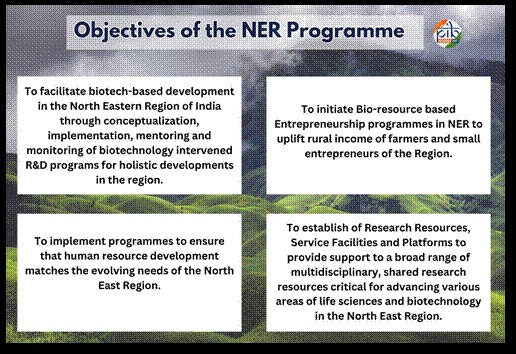
- 25 Feb 2025
In News:
The North Eastern Region (NER) of India, endowed with rich biodiversity, cultural heritage, and indigenous knowledge, is undergoing a transformation through biotechnology-led initiatives. The Department of Biotechnology (DBT) under the Ministry of Science and Technology is spearheading this change to harness the region’s biological resources for inclusive and sustainable development.
Biotechnology: Definition and Types
Biotechnology involves the use of biological systems or organisms to develop products and technologies that improve healthcare, agriculture, industry, and the environment.
Types of Biotechnology:
- Medical Biotechnology – Vaccines, gene therapy, diagnostics.
- Agricultural Biotechnology – Pest-resistant crops, high-yield seeds, and sustainable agriculture.
- Industrial Biotechnology – Biofuels, biodegradable plastics, enzyme-based processes.
- Environmental Biotechnology – Waste treatment, pollution control, and bioremediation.
Why North East India is Ideal for Biotech Development
- Biodiversity Hotspot: Home to 8,000+ plant species, including 850+ medicinal plants and agro-climatic diversity.
- Indigenous Knowledge: Rich traditional practices in herbal medicine and organic farming.
- Agri-Biotech Potential: Ideal for medicinal crops, essential oils, and organic produce.
- Industrial Opportunity: Scope for biofuel production, value-added food processing, and pharmaceutical industries.
Key DBT Programmes and Initiatives in the North East
- DBT North Eastern Programme
- Since 2010, 10% of DBT’s annual budget is dedicated to NER.
- Focus: R&D, education, infrastructure, entrepreneurship, and employment generation in biotechnology.
- Twinning R&D Programme (2010–11)
- Promotes collaborative biotech research between NER and national institutes.
- Over 65 institutional partnerships, supporting 650+ projects and benefiting ~2,500 researchers/students.
- Biotech Hubs Network (Since 2011)
- 126 Biotech Hubs established across universities and colleges.
- Phase II supports 54 hubs for focused research on local issues.
- BLiSS (Biotech Labs in Senior Secondary Schools): Started in 2014 to introduce biotechnology at the school level.
- Visiting Research Professorship (VRP) Programme:Launched in 2015 to utilize the expertise of top scientists for NER biotechnology development.
- Chemical Ecology Programme (2015): Collaborative training by NCBS, UAS, and IISc for Ph.D. scholars in the field of chemical ecology.
- Genomics Training Programme (2016):Conducted by DBT-NIBMG, Kalyani, for biomedical researchers in the region.
Agri-Biotech and Livelihood-Oriented Initiatives
- DBT-NECAB (Phase III): Enhancing biotech applications in agriculture.
- Citrus Research: Disease-free scion material of Khasi mandarin and sweet orange developed at IHT, Assam.
- Medicinal Crop Cultivation: 64.1 acres under Curcuma caesia and lemongrass cultivation; 649 farmers trained.
- Essential Oil Distillation: Facility set up in Mudoi village, Arunachal Pradesh, for revenue support.
- Value-Addition in Wild Fruits: Docynia indica (Assam apple) processed into products like jam, pickles, and candy.
Technology-Driven Achievements
- Bacterial Blight-Resistant Rice (Patkai): Developed by Assam Agricultural University; notified by CVRC.
- Brucellosis Detection Kit: Lateral Flow Assay (LFA) to detect anti-Brucella antibodies in livestock.
- Pig Disease Diagnosis Expert System (PDDES): Mobile app for livestock disease detection and management (available on Google Play Store).
Challenges in NER’s Biotech Growth
- Limited infrastructure for biotech R&D and production.
- High cost of commercial biotech projects.
- Shortage of trained professionals in advanced biotech fields.
- Vulnerability to climate change and poor connectivity with markets.
Way Forward
- Strengthen Infrastructure: Develop biotech parks, R&D centers, and incubators.
- Skill Development: Train local youth, researchers, and farmers.
- Public-Private Partnerships: Foster industrial collaboration for startups and innovation.
- Eco-friendly Technologies: Promote sustainable and low-impact biotech industries.
- Digital Integration: Use AI and data analytics for agricultural and healthcare biotech solutions.
Northern White Rhino
- 25 Feb 2025
In News:
The Northern White Rhino (NWR) is on the brink of extinction, with only two females—Najin and Fatu—remaining at the Ol Pejeta Conservancy in Kenya. However, a breakthrough in In-Vitro Fertilization (IVF) has rekindled hope for reviving this subspecies, with 36 lab-created embryos ready for implantation. This effort is part of an international project named BioRescue.
About the White Rhino
- Scientific Name: Ceratotherium simum
- Common Name: Square-lipped rhinoceros (due to broad upper lip)
- Subspecies:
- Northern White Rhino (Ceratotherium simum cottoni)
- Southern White Rhino (Ceratotherium simum simum)
- Habitat:
- Southern White Rhino: South Africa, Namibia, Zimbabwe, Kenya
- Northern White Rhino: Historically central and eastern Africa; now only in captivity
- IUCN Status:
- White Rhino (overall): Near Threatened
- Northern White Rhino: Critically Endangered
- Southern White Rhino: Near Threatened
Biological Features
- Second-largest land mammal after elephants
- Square upper lip adapted for grazing on short grasses
- Two horns, with the front horn being larger
- No actual color difference between black and white rhinos
Social & Dietary Behavior
- Diet: Pure herbivores; feed almost exclusively on short grasses
- Behavior:
- Semi-social and territorial
- Males mark territories with dung
- SWRs form larger social herds; NWRs were found in smaller groups
Threats to Survival
- Poaching for horns
- Habitat loss due to human encroachment
- Civil unrest, particularly in their native range
- Low genetic diversity, especially critical in the NWR
- Climate change, affecting habitat and water sources
Conservation Through Reproductive Technology
BioRescue Initiative
- An international scientific effort launched in 2015 to save the NWR using advanced reproductive technologies.
- Uses frozen sperm from deceased males and eggs from Najin and Fatu to create embryos in the lab.
- 36 embryos have been successfully created and are stored for future implantation.
IVF and Surrogacy
- First-ever rhino pregnancy via lab-made embryo announced recently.
- Southern white rhinos are used as surrogate mothers due to genetic similarity and higher population.
- IVF and embryo transfers are the only options since the last male NWR, Sudan, died in 2018, and both remaining females are non-reproductive due to age and health.
Challenges & Concerns
- Limited gene pool restricts genetic variability.
- Loss of unique traits if crossbred with southern white rhinos.
- Behavioral imprinting: IVF calves must learn from remaining NWR females before they pass away.
- Ethical and ecological concerns: Critics argue conservation must also address root causes like poaching, habitat destruction, and lack of genetic diversity, not just focus on “test-tube” solutions.
Indian Rhinoceros
- Scientific Name: Rhinoceros unicornis (Greater One-Horned Rhino)
- IUCN Status: Vulnerable
- Habitat: Indian subcontinent (Assam, West Bengal, UP, Nepal)
- It is distinct from African rhinos, both genetically and ecologically.
Electronic Personnel License (EPL) for Pilots
- 25 Feb 2025
In News:
India has launched the Electronic Personnel License (EPL) for pilots, becoming the second country globally, after China, to implement this advanced digital licensing system.
What is EPL?
- Electronic Personnel License (EPL) is a digital version of pilot licenses, replacing the traditional physical cards.
- Pilots can securely access their EPL via the eGCA Mobile Application developed by the Directorate General of Civil Aviation (DGCA).
- It ensures real-time verification, enhancing efficiency, transparency, and security in licensing procedures.
Significance of EPL
- Aligns with:
- Digital India and Ease of Doing Business initiatives.
- ICAO’s Amendment 178 to Annex 1 on Personnel Licensing, promoting digital transformation.
- Enhances:
- Safety and efficiency in civil aviation operations.
- Environmental sustainability by reducing the use of plastic and paper.
- Global employability of Indian pilots through instant international credential verification.
Implementation & Governance
- Ministry: Ministry of Civil Aviation, Government of India.
- Executing Agency: Directorate General of Civil Aviation (DGCA).
- EPL implementation positions India as a leader in aviation innovation and modern governance.
International Civil Aviation Organization (ICAO):
- Established: 1947 under the Chicago Convention (1944).
- Headquarters: Montreal, Canada.
- Nature: A specialized intergovernmental agency affiliated with the United Nations (UN).
- Functions:
- Sets standards and regulations for aviation safety, security, efficiency, and environmental performance.
- Promotes peaceful and efficient international air transport.
- Facilitates global cooperation and market liberalization in aviation.
Jhumoir Binandini (Jhumur) Dance
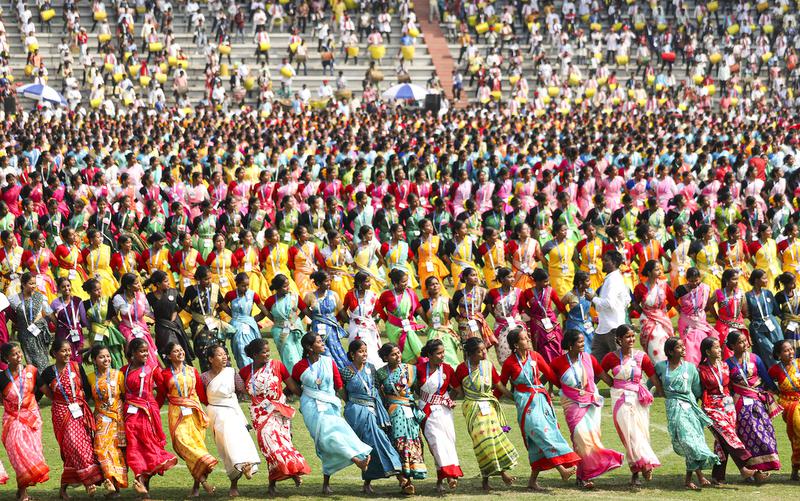
- 25 Feb 2025
In News:
The Prime Minister of India is set to attend the Jhumoir Binandini (Mega Jhumoir) 2025, a grand cultural event featuring around 8,600 performers showcasing the traditional Jhumur dance. This event highlights the rich cultural contributions of the tea tribe community of Assam.
About Jhumoir (Jhumur) Dance
- Jhumur, also known as Jhumoir, is a traditional folk dance performed predominantly by the Adivasi tea tribes of Assam.
- It is typically showcased during the harvest season, as well as on occasions like weddings and community festivals.
- The dance was introduced to Assam by the tea garden workers, who originally migrated from regions like Jharkhand, Odisha, Chhattisgarh, and West Bengal in the 19th century under British colonial rule.
Cultural Origins and Community
- The dance traces its roots to the Sadan ethnolinguistic group from the Chotanagpur plateau (present-day Jharkhand).
- The tea tribe community is a multi-ethnic group comprising descendants of migrant tea garden laborers.
- These communities have significantly shaped Assam’s socio-cultural landscape.
Performance Style and Attire
- Jhumur is performed in a circular formation, with dancers often holding each other's waists.
- The performance features rhythmic footwork, swaying movements, and energetic music.
- Women typically wear colorful sarees, often in red and white, while men dress in dhotis and kurtas.
- The musical accompaniment includes traditional instruments like the Madal, Dhol, Dhak, Taal (cymbals), and Flute.
Themes and Social Significance
- Jhumur songs blend liveliness with social commentary, often highlighting the struggles, exploitation, and migration experiences of the tea plantation workers.
- Major tea garden festivals where Jhumur is performed include Tushu Puja and Karam Puja, both celebrating the harvest.
- The dance fosters community bonding, promotes cultural pride, and represents Assam’s syncretic cultural heritage.
- It stands as a symbol of inclusivity, unity, and the resilience of the tea tribe community.
Dr. Purnima Devi Barman
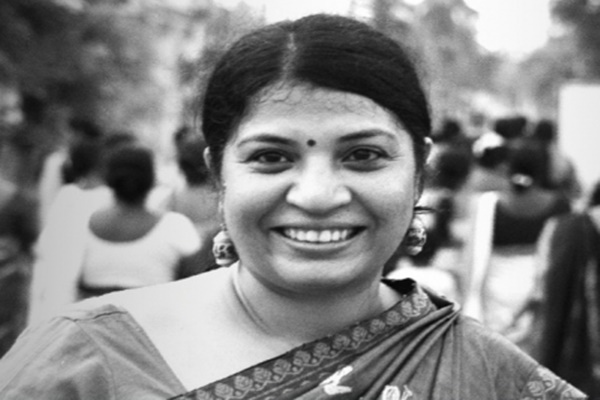
- 24 Feb 2025
In News:
Indian wildlife biologist Dr. Purnima Devi Barman has been named among TIME Magazine’s Women of the Year 2025, recognizing her as one of 13 global leaders working toward a more equitable and sustainable world. She is the only Indian woman on the list.
Key Contributions:
- Known for her pioneering conservation work with the greater adjutant stork (locally called Hargila), once critically endangered and culturally stigmatized in Assam.
- Founded the Hargila Army, a women-led grassroots movement focused on protecting the stork’s habitat and changing negative local perceptions.
- Her model uniquely blends wildlife conservation with women’s empowerment, engaging thousands of rural women in ecological and livelihood activities.
Impact:
- Due to her efforts, the greater adjutant stork’s population in Assam has significantly recovered, leading to its status being upgraded from “endangered” to “near threatened” by IUCN.
- The Hargila Army, with over 10,000 members, participates in bird rescue, awareness campaigns, tree planting, and embroidery-based income generation.
- Her approach has become a global model for community-based conservation.
Background:
- Hails from the Kamrup region of Assam.
- Holds a Master’s degree in Zoology from Gauhati University.
- Inspired by her early life near the Brahmaputra and her grandmother’s teachings on biodiversity.
Awards & Recognition:
- Nari Shakti Puraskar (2017) – India’s highest civilian award for women.
- UN Champions of the Earth Award (2022) – For entrepreneurial vision in conservation.
- Whitley Gold Award (2017, 2024) – Often called the "Green Oscar".
Other Roles:
- Director of Women in Nature Network (YNN) – India chapter.
- Member of IUCN’s Stork, Ibis, and Spoonbill Specialist Group.
About TIME Magazine:
- Founded in 1923, USA.
- Known for its global recognitions like Person of the Year and Women of the Year.
- Now operates as a multimedia platform covering politics, science, and culture.
Microsoft’s Majorana 1 Quantum Chip
- 24 Feb 2025
In News:
Microsoft has unveiled Majorana 1, a new quantum chip that marks a significant advancement in quantum computing, suggesting that scalable quantum systems could be achieved in years rather than decades.
What is Majorana 1?
- It is the world’s first quantum chip built on a topological architecture, using Majorana fermions, exotic subatomic particles that are both particles and antiparticles.
- The chip is designed to be more stable and error-resistant than current quantum technologies developed by competitors like Google and IBM.
Core Technology & Innovation:
- Material Composition: Made from indium arsenide (a semiconductor) and aluminum (a superconductor).
- Topological Superconductivity: When cooled near absolute zero and exposed to magnetic fields, it enables the formation of Majorana Zero Modes, which serve as building blocks for stable qubits.
- Topoconductor Architecture: A new class of materials creating a topological state, offering enhanced fault tolerance.
Quantum Advantage:
- Qubit Efficiency: Majorana 1 reduces the number of physical qubits needed to generate logical (error-corrected) qubits.
- Error-Resistance: Its design addresses two major quantum computing limitations — qubit instability (decoherence) and high error rates.
- Scalability Potential: The chip includes eight topological qubits, with future potential to scale up to a million-qubit system.
Why This Matters:
- Improved Reliability: Lower error rates enhance the practical applicability of quantum systems.
- Accelerated Development: Brings the world closer to realizing commercially viable quantum computers.
- Wide Applications: Potential use in drug discovery, material science, clean energy solutions, and more.
- AI Integration: May combine with artificial intelligence to tackle global challenges like microplastic degradation.
Quantum Computing in Brief:
- Quantum Computers use qubits and properties like superposition and entanglement to perform highly complex calculations.
- Major Challenges: Qubit instability and error correction.
- Significance: Quantum computing could revolutionize fields by solving problems beyond the reach of classical computers.
Technology Adoption Fund (TAF)
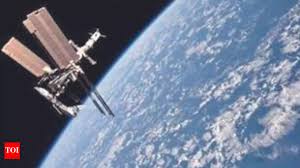
- 24 Feb 2025
In News:
IN-SPACe, India’s space sector regulator under the Department of Space, has launched the Technology Adoption Fund (TAF) to accelerate the commercialization of indigenous space technologies.
About TAF:
- Objective: To bridge the gap between early-stage innovation and market-ready space solutions developed by Indian startups, MSMEs, and industries.
- Goal: Reduce dependence on imported technologies and strengthen India's position in the global space sector.
Key Features:
- Financial Support:
- Startups/MSMEs: Up to 60% of project cost.
- Larger industries: Up to 40%.
- Funding cap: ?25 crore per project.
- Eligibility: Open to all non-government entities (NGEs) with commercially viable space innovations.
- Support Provided:
- Partial funding for development and commercialization.
- Technical mentoring and guidance.
- Focus Areas: Launch vehicles, satellites, space-based applications, and related services.
- Outcomes Expected:
- Development of new space products.
- Intellectual property generation.
- Enhanced production capabilities.
- Economic growth and job creation.
About IN-SPACe:
- Established: 2020
- Ministry: Department of Space
- Location: Ahmedabad, Gujarat
- Role: Single-window agency promoting private participation in India's space ecosystem.
- Functions:
- Authorizes and monitors private sector space activities.
- Facilitates access to ISRO infrastructure.
- Collaborates with academia, industry, and research bodies.
Significance:
- Encourages private innovation in space tech.
- Aligns with the larger vision of making India a hub for space entrepreneurship.
- Strengthens India’s self-reliance and competitiveness in global space technology.
Remission and the Supreme Court’s 2025 Ruling
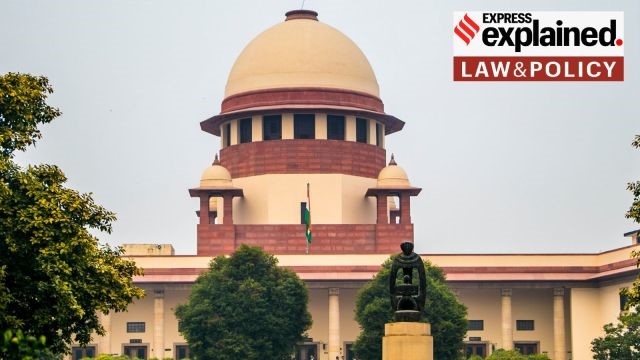
- 24 Feb 2025
In News:
Recently, the Supreme Court directed states with remission policies to consider the premature release of prisoners even if they don’t apply for remission beforehand.
What is Remission?
- Remission refers to the reduction of a convict's sentence by the government before the term is completed. It does not nullify the conviction, but shortens imprisonment.
- It is governed by:
- Section 473 of BNSS, 2023 (earlier Section 432 of CrPC, 1973) – empowers state governments to grant remission.
- Articles 72 and 161 of the Constitution – empower the President and Governors respectively to remit sentences.
- Section 475 of BNSS (earlier Section 433A CrPC) – restricts remission for life convicts found guilty of offences punishable by death until 14 years of imprisonment are completed.
Background: SC’s Suo Motu Intervention
- The Supreme Court in 2025, in the suomotu case In Re: Policy Strategy for Grant of Bail, altered the interpretation of remission rules to address prison overcrowding.
- The Court held that states must consider remission for eligible convicts even without a formal application, if a remission policy exists.
Shift in Judicial Interpretation
- Earlier rulings (Sangeet v. Haryana and Mohinder Singh v. Punjab, 2013) required a convict's application for remission.
- The 2025 judgment acknowledges that many state prison manuals already mandate prison authorities to initiate remission review.
- It recognized that failing to consider remission proactively could lead to arbitrary discrimination, violating Article 14 (Right to Equality).
Key Guidelines Issued by the Supreme Court
- Suo motu Remission:States must automatically assess eligibility under remission policies—no application needed.
- Mandatory Remission Policy:States without existing remission policies must formulate a comprehensive one within two months.
- Conditions for Remission Must Be:
- Reasonable, non-oppressive, and clearly defined.
- Based on factors like motive, criminal background, and public safety.
- Aimed at rehabilitation and prevention of recurrence.
- Safeguards Against Arbitrary Cancellation:
- Minor breaches shouldn’t lead to automatic cancellation.
- Notice and hearing must be given before cancellation.
- Transparency:
- Legal aid bodies must monitor remission cases.
- States to maintain real-time digital data on remission.
Significance and Implications
- The ruling helps streamline remission processes and could contribute to decongesting Indian prisons, which are heavily overcrowded.
- It ensures uniformity and fairness in the exercise of executive powers related to sentencing.
- Reinforces constitutional values of equality and procedural fairness for prisoners.
Note:
- Remission ≠ Pardon: Remission reduces sentence, doesn’t erase conviction.
- Articles 72 & 161: Concern constitutional remission powers (President & Governor).
- BNSS Sections 473 & 475: Replace CrPC Sections 432 & 433A, relevant for state remission powers.
- Suo motu action by SC: Taken to address systemic prison overcrowding.
- Article 14 invoked: To ensure equitable treatment of eligible prisoners.
Brazil Joins OPEC+
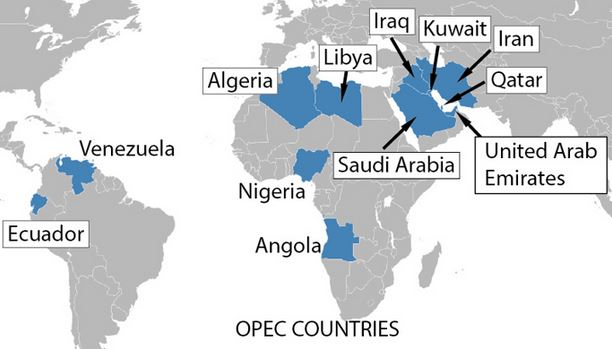
- 24 Feb 2025
Brazil Joins OPEC+
Source: Times of India
In News:
In February 2025, Brazil officially joined OPEC+, a coalition of oil-producing nations. This development comes ahead of Brazil hosting COP30, the annual UN climate summit.
About OPEC and OPEC+
- OPEC (Organization of the Petroleum Exporting Countries):
- A permanent intergovernmental organization established in 1960 at the Baghdad Conference.
- Aims to coordinate and unify petroleum policies to ensure stable prices and regular supply.
- Headquartered in Vienna, Austria.
- Current members include Saudi Arabia, Iran, Iraq, UAE, Nigeria, Libya, Algeria, and others.
- OPEC+ Formation:
- Created in 2016 to stabilize oil markets, particularly in response to rising U.S. shale oil production.
- Includes 12 OPEC members plus 11 non-OPEC countries like Russia, Kazakhstan, Mexico, and now Brazil (2025).
- Functions as a forum for strategic discussions but not all members are bound by production quotas.
Brazil’s Role and Strategic Significance
- Oil Production Status:
- Seventh-largest oil producer globally, with around 4.3 million barrels/day.
- In 2024, crude oil became Brazil’s top export, overtaking soybeans.
- OPEC+ Membership:
- Brazil joins the Charter of Cooperation but retains autonomy in production decisions.
- It seeks to influence global oil policy while protecting its energy interests.
- Balancing Act:
- While focusing on oil revenue for economic growth and energy transition funding, Brazil also pursues renewable energy through agencies like IRENA.
- This dual approach reflects an attempt to align development with environmental commitments.
Environmental Concerns and Criticism
- Brazil’s decision to expand oil exploration—especially near sensitive ecosystems like the Amazon—has drawn criticism.
- Environmentalists argue it contradicts climate goals, particularly as Brazil prepares to host COP30.
Note:
- OPEC+ is not a formal organization but a strategic alliance.
- Brazil is part of OPEC+ but is not bound by production quotas.
- OPEC’s headquarters is in Vienna, Austria (Austria is not an OPEC member).
- India is not a member of OPEC or OPEC+.
Ali Ai Ligang Festival and the Mising Tribe
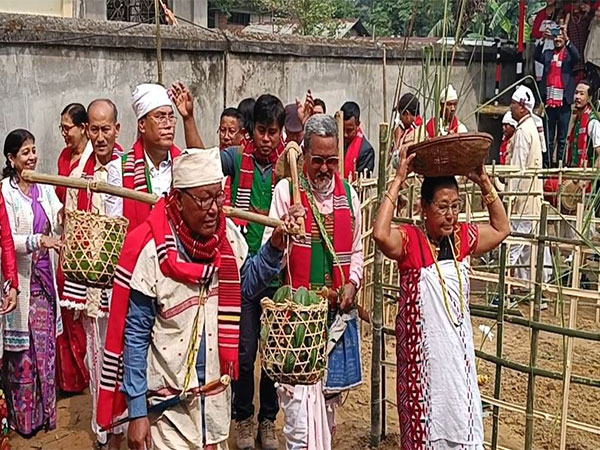
- 23 Feb 2025
In News:
The Mising tribe, Assam’s largest tribal community, celebrated Ali Ai Ligang in Shankarpur, Jorhat, on the first Wednesday of the Fagun month.
About the Mising Tribe
- Region: Indigenous tribe from Northeast India; primarily reside in Upper Assam and parts of Arunachal Pradesh, with some presence in South Tibet (China).
- Population: As per Census 2011, there are 6,80,424 Mising people in Assam.
- Ethnolinguistic Group: Belong to the Tani group, speak Tibeto-Burmese languages.
- Referred as: Called “Lhobhas” (southerners) by Tibetans.
- Unique Feature: Known as the only riparian tribe of Northeast India, with livelihoods closely linked to rivers like the Brahmaputra.
- Habitat: Construct stilt houses known as Chang Ghar to withstand seasonal floods.
Cultural and Religious Practices
- Religion: Practice Donyi-Poloism – worship of the Sun (Donyi) and the Moon (Polo) as supreme deities.
- Traditional Economy:
- Traditionally practiced Jhum (slash and burn) cultivation.
- Now settled cultivators skilled in wet paddy cultivation.
- Engage in fishing, weaving, and vegetable farming.
- Women are proficient in weaving traditional Mising textiles.
Ali Ai Ligang Festival
- Main Festival of the Mising community.
- Timing: Celebrated in February, on the first Wednesday of Fagun month (as per the Assamese calendar).
- Name Meaning:
- Ali – edible root
- Ai – seed
- Ligang – sowing
Signifies the beginning of the agricultural cycle – first sowing of seeds and roots.
Significance and Rituals
- Purpose: Marks the start of cultivation, invokes blessings from Donyi-Polo to protect crops from pests and natural calamities.
- Community Importance: Strengthens communal ties and preserves agrarian traditions.
- Ritual Practices:
- Morung Okum (Morung Ghar) – youth dormitory where offerings like Apong (rice beer), dry meat, and fish are made.
- Gumrag Dance – performed by men and women to signify joy, unity, and prosperity.
- Feast and Dress – Traditional Mising delicacies are prepared, and people wear colorful ethnic attire.
Modern Celebrations
- Originally village-based, now also celebrated in urban centers like Jorhat.
- Includes stage performances, cultural competitions, and large community gatherings.
- In Jorhat, it has been celebrated for the past 40 years, organized annually by Mising Agom Kebang (Mising apex literary and cultural body).
SWARBICA Executive Body Meeting 2025
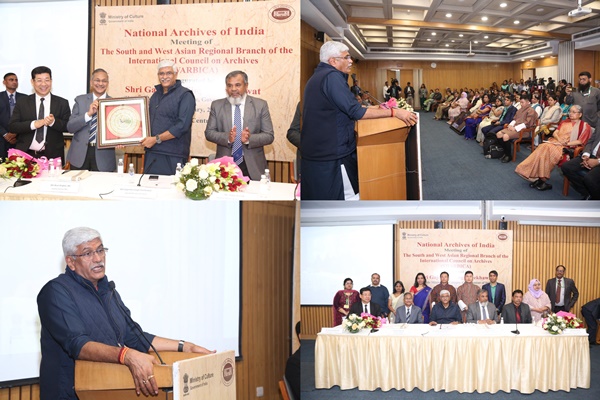
- 23 Feb 2025
In News:
- The Executive Body Meeting of the South and West Asian Regional Branch of the International Council on Archives (SWARBICA) was held on 20–21 February 2025 at the India International Centre, New Delhi.
- It was inaugurated by Union Minister for Culture and Tourism, Gajendra Singh Shekhawat, and hosted by the National Archives of India.
- This is the second time India has hosted the SWARBICA meeting, the last being in Colombo, Sri Lanka, in 2017.
Key Highlights
- The event marked the first SWARBICA Executive Meeting in eight years.
- Participating nations included Nepal, Bhutan, Bangladesh, and Sri Lanka.
- Pakistan joined the meeting virtually, while Iran could not attend due to visa-related issues.
- The meeting provided a platform for regional cooperation in archival development, emphasizing shared cultural and religious heritage.
Agenda and Focus Areas
- Digital Preservation & Archives Digitization:
- Arun Singhal, Director General of the National Archives of India (NAI) and Treasurer of SWARBICA, presented NAI’s ongoing efforts in the digitization of archival records.
- Emphasis was placed on training programs, technical exchange, and conservation practices.
- AI in Digital Archiving:
- Aseminar titled "Using AI for Digital Preservation in Archives" was organized.
- Experts from India, Bangladesh, Nepal, Sri Lanka, and SAMHiTA (India International Centre) discussed the potential of artificial intelligence in archival science.
About SWARBICA
- It functions as a regional arm of the International Council on Archives (ICA), fostering collaboration among archival institutions in South and West Asia.
- Established: The idea was proposed in 1973 at an ICA meeting in Brussels and officially launched on 11th December 1976 at Vigyan Bhawan, New Delhi.
- SWARBICA promotes professional networking, training, resource sharing, and advancement in archival practices among member countries.
Significance for India
- Reflects India’s leadership in regional cultural cooperation.
- Aligns with national goals of digital governance, knowledge preservation, and heritage conservation.
- Strengthens India's cultural diplomacy in South and West Asia.
Mass Stranding of False Killer Whales in Tasmania
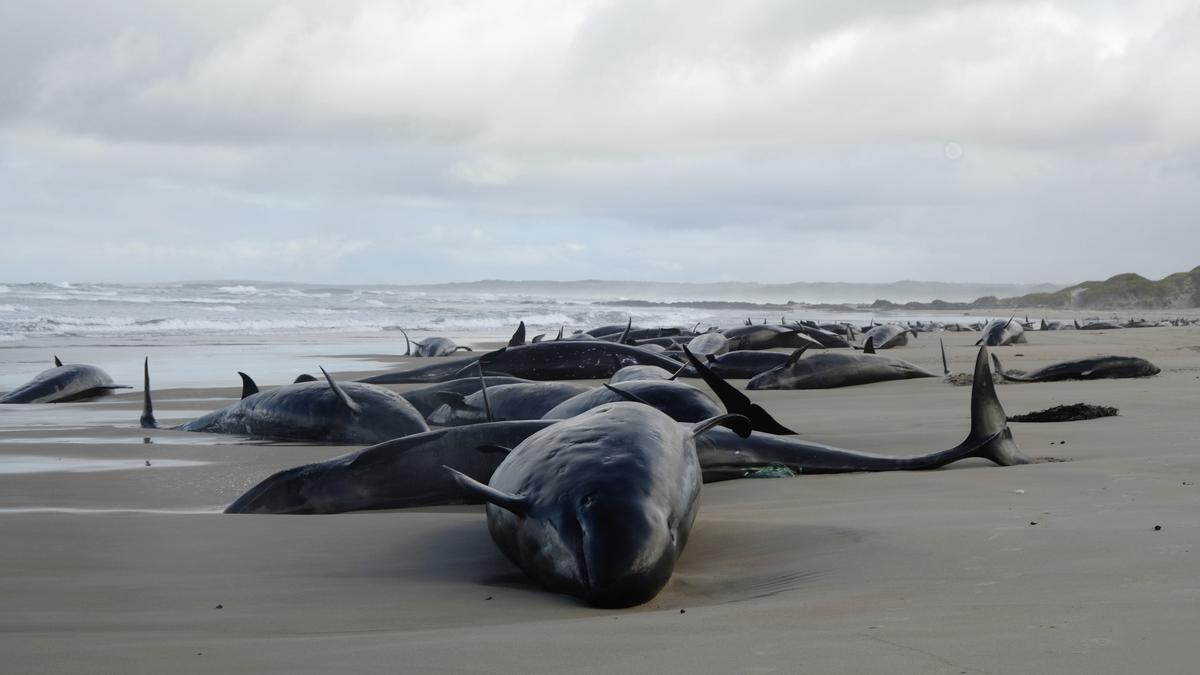
- 23 Feb 2025
In News:
Recently, over 150 false killer whales were found stranded on a remote beach near Arthur River on the northwest coast of Tasmania, Australia. The incident is one of several mass strandings reported in the region in recent years.
The event echoes earlier mass strandings:
- In 2022, 230 pilot whales stranded at Macquarie Harbor.
- In 2020, 470 long-finned pilot whales were stranded at the same site—the largest mass stranding in Australian history.
Possible Causes of Whale Strandings
Although the precise cause remains uncertain, potential factors include:
- Disorientation from loud underwater noises (e.g., naval exercises, seismic surveys)
- Illness, old age, injury
- Fleeing predators
- Severe weather events
- Geomagnetic anomalies
About False Killer Whales
- False killer whales (Pseudorca crassidens) are not true killer whales but belong to the Delphinidae family, which also includes dolphins and pilot whales.
- They are large, social cetaceans, often found in warm, deep oceanic waters.
- These whales are highly vocal and social, forming strong social bonds within pods.
- Like other cetaceans, they rely on echolocation (underwater sound) for communication, hunting, and navigation.
About Killer Whales (Orcas)
- Although not involved in the stranding, killer whales (Orcinus orca) are relevant as close relatives within the same family (Delphinidae).
- Known for their distinct black and white markings, orcas are the largest members of the dolphin family.
- They are globally distributed in both open oceans and coastal waters.
- Killer whales live in stable matrilineal pods and use complex vocalizations.
Conservation Status
- The IUCN Red List classifies false killer whales and killer whales as Data Deficient, indicating that there is insufficient information to assess their risk of extinction.
WEST Tokamak Reactor

- 23 Feb 2025
In News:
The WEST Tokamak reactor in southern France has set a new world record by sustaining a nuclear fusion plasma for 1,337 seconds (22 minutes and 17 seconds), surpassing the previous record of 1,066 seconds held by China’s EAST reactor by 25%. This achievement is a major milestone in the global quest for clean, limitless energy through nuclear fusion.
About Nuclear Fusion
- Nuclear Fusion is the process of combining two light atomic nuclei (typically deuterium and tritium) to form a heavier nucleus, releasing vast amounts of energy.
- The mass defect (loss of mass) in the fusion process converts into energy, as per Einstein’s equation E=mc2E = mc^2E=mc2.
- This reaction occurs in the plasma state—a hot, ionized gas consisting of free electrons and atomic nuclei.
How Tokamak Reactors Work
- A Tokamak is a doughnut-shaped (toroidal) magnetic confinement device that replicates the Sun’s fusion process.
- It uses superconducting magnetic coils to confine and heat the plasma to temperatures exceeding 50 million°C, about three times hotter than the Sun's core.
- Fusion reactors inject external power (WEST used 2 MW) to maintain the plasma and prevent it from touching reactor walls.
WEST Reactor: Key Highlights
- Operated by the French Alternative Energies and Atomic Energy Commission (CEA).
- Aims to simulate long-duration, high-temperature plasma conditions.
- Reached a plasma state sustained for over 22 minutes at 50 million°C.
- Contributes critical insights and validation to the ongoing ITER project, the world’s largest nuclear fusion experiment also based in southern France.
Significance of the Achievement
To make fusion viable for electricity generation, three key conditions must be met:
- High temperature – to overcome electrostatic repulsion between nuclei.
- Sustained confinement time – achieved by WEST.
- Sufficient plasma density – to ensure high collision rates.
Maintaining plasma for extended durations is crucial for transitioning from experimental reactors to commercial fusion energy systems.
Advantages of Nuclear Fusion
- High Energy Output: Produces 4x more energy per kg of fuel than fission, and nearly 4 million times more than fossil fuels.
- Environmentally Clean: Emits no greenhouse gases or long-lived radioactive waste. Only byproducts are inert helium and neutrons.
- Abundant Fuel Supply: Fusion uses deuterium (from seawater) and tritium, eliminating the need for uranium mining.
- Inherent Safety: Fusion reactions are inherently safe as they cannot trigger uncontrolled chain reactions, unlike fission.
Fusion vs. Fission: A Comparison
Aspect Nuclear Fusion Nuclear Fission
Process Combines light nuclei Splits heavy nuclei
Fuel Deuterium and Tritium Uranium or Plutonium
Energy Output Extremely high Moderate
Waste Minimal and short-lived Long-lived radioactive waste
Emissions No greenhouse gases Potential radiation hazards
Safety No risk of meltdown Risk of runaway reactions/meltdowns
Global Perspective
- Over 200 tokamaks are operational globally.
- The ITER project is set to become the centerpiece of global fusion research.
- Recent breakthroughs like those at WEST provide a technical roadmap for future commercial reactors.
Nvidia's Evo 2
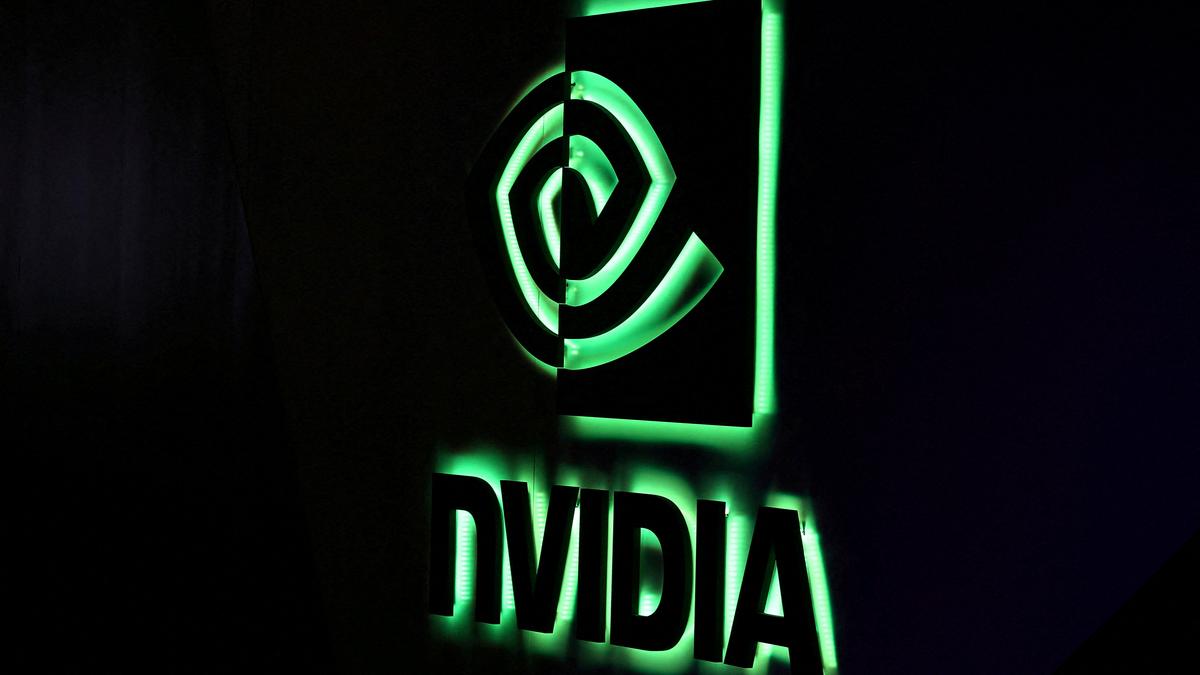
- 23 Feb 2025
In News:
Nvidia, in collaboration with the Arc Institute and Stanford University, has launched Evo 2 — the world’s largest publicly available AI model for genomic data — aiming to revolutionize genetic research and biomedical innovation.
About Evo 2
- Type: Foundation AI model for genomics.
- Function: Understands and designs genetic code across all domains of life.
- Scale: Trained on ~9 trillion nucleotides from 128,000+ organisms, including bacteria, plants, animals, and humans.
- Platform: Built using 2,000 Nvidia H100 processors on Amazon Cloud, through the NVIDIA DGX Cloud platform.
- Access: Freely available on Nvidia’s BioNeMo research platform.
Key Features
- Accuracy in Mutation Detection:Accurately identified 90% of harmful mutations in BRCA1 — a gene linked to breast cancer.
- Speed and Efficiency:Enables rapid pattern recognition in vast genomic datasets — research that would otherwise take years.
- Collaborative Development:Created by Nvidia in partnership with Arc Institute (nonprofit research body founded in 2021 with $650 million funding) and Stanford University.
Applications
- Healthcare & Medicine:
- Predicts form and function of proteins.
- Identifies gene mutations and their impact.
- Facilitates precision medicine and gene therapy development.
- Agricultural Biotechnology:
- Aids in designing climate-resilient crops.
- Industrial & Environmental Science:
- Assists in creating enzymes to break down pollutants.
- Supports development of new bio-materials.
Significance for India & Global Science
- Accelerates biomolecular research and biotech innovation.
- Contributes to scientific self-reliance and the bioeconomy.
- Enhances capability in combating diseases like cancer and improving food security.
Meta’s Project Waterworth
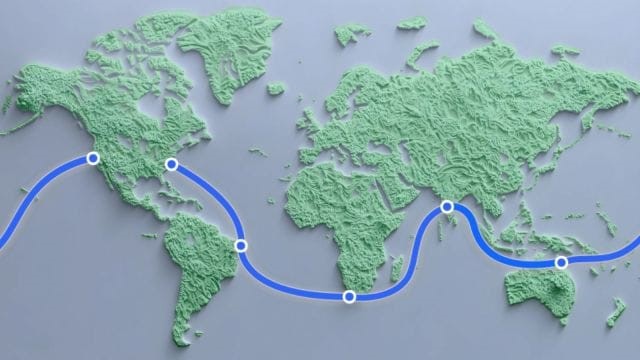
- 22 Feb 2025
In News:
Meta has launched Project Waterworth, its most ambitious subsea cable initiative to date, aimed at enhancing global digital connectivity. The project involves the deployment of AI-driven subsea cable infrastructure, with India being a key beneficiary.
Key Features:
- Massive Scale:A multi-billion dollar, multi-year global initiative, the project will lay over 50,000 km of undersea cables, connecting five continents, including India, the USA, Brazil, South Africa, and others.
- AI Integration:The project leverages advanced machine learning models to predict and mitigate network disruptions, ensuring greater resilience and reliability of global internet infrastructure.
- Deep Water Deployment:The cable will operate at depths reaching 7,000 meters, using enhanced burial techniques in high-risk areas to prevent damage from ship anchors and other maritime hazards.
- Digital Backbone:Subsea cables like those in Project Waterworth currently carry over 95% of global internet traffic, forming the backbone of international digital communication, video streaming, e-commerce, and cloud-based AI services.
Strategic Relevance for India:
- India’s Digital Push:The project supports India’s growing digital economy by ensuring faster, more reliable internet connectivity and fostering digital inclusion and innovation.
- AI and Infrastructure Synergy:With AI-driven maintenance and deployment, the initiative complements India's vision of becoming a global hub for AI, data centers, and digital services.
- Economic and Strategic Benefits:Enhanced connectivity is expected to boost economic cooperation, cross-border trade, and participation in global digital platforms.
India–Qatar Strategic Partnership
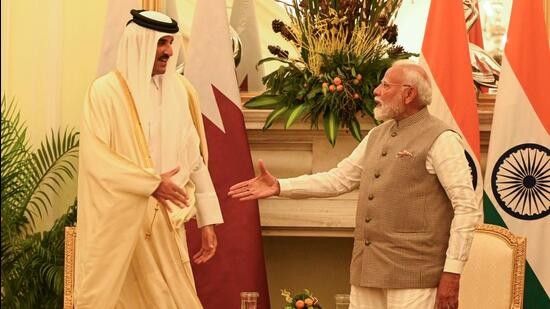
- 22 Feb 2025
In News:
In February 2025, His Highness Sheikh Tamim bin Hamad Al-Thani, Amir of Qatar, paid a State Visit to India, during which India and Qatar elevated their bilateral relations to a Strategic Partnership.
Major Outcomes of the 2025 Summit
- Strategic Partnership Agreement:Formalized multifaceted cooperation across sectors—trade, investment, energy, security, technology, and people-to-people ties.
- Trade and Economic Engagement:
- Target set to double bilateral trade to $30 billion by 2030 (from $14 billion in FY 2023–24).
- Joint Commission on Trade and Commerce established to monitor economic ties.
- Qatar Investment Authority (QIA) pledged $10 billion in Indian infrastructure, green energy, and startups.
- Revised Double Taxation Avoidance Agreement signed.
- Energy Cooperation:
- A landmark 20-year LNG supply deal (2028–2048) between QatarEnergy and Petronet LNG.
- Collaboration in renewable energy including green hydrogen, solar energy, and AI-based efficiency solutions.
- Investment and Digital Integration:
- QIA to open an office in India; Qatar National Bank to set up presence in GIFT City.
- India’s UPI system operationalized in Qatar's POS infrastructure; nationwide rollout planned.
- Technology and Innovation:
- Cooperation in AI, semiconductors, IoT, robotics and digital governance.
- Indian startups to participate in Web Summits in Doha (2024–25).
People-to-People and Cultural Ties
- Over 830,000 Indians reside in Qatar, forming the largest expatriate community.
- MoUs signed on youth, sports, education, archives, and cultural cooperation.
- Agreement to celebrate India-Qatar Year of Culture, Friendship and Sports.
Security and Counter-Terrorism
- Strong condemnation of terrorism in all forms, including cross-border terrorism.
- Commitment to enhanced cooperation in intelligence sharing, cybercrime, anti-money laundering, and countering transnational crimes.
- Emphasis on regular meetings of the Joint Committee on Security and Law Enforcement.
Labour and Health Cooperation
- Agreement to hold regular Joint Working Group on Labour and Employment to address expatriate welfare and mobility.
- Collaboration in the health sector, including pharma exports, device registration, and pandemic response mechanisms.
Geopolitical and Multilateral Cooperation
- Exchange of views on Middle East stability, UN reforms, and India-GCC engagement.
- Appreciation for Qatar’s Chairmanship of the India-GCC Strategic Dialogue (Sept 2024).
- Agreement on UN Security Council reform and advancing SDG goals through multilateralism.
Challenges Ahead
- Trade Imbalance: Imports of LNG/LPG ($12B) far exceed exports (<$2B).
- Labour Rights Concerns: Working conditions of Indian laborers in Qatar remain under scrutiny.
- Legal and Judicial Issues: Over 600 Indians in Qatari jails; need for agreement on transfer of sentenced persons.
- Geopolitical Complexities: Qatar’s involvement in West Asian diplomacy presents nuanced challenges.
- Naval Veterans Case: Pending resolution affects diplomatic sentiment.
Way Forward
- Boost Indian exports in pharmaceuticals, IT, engineering goods.
- Expedite India-Qatar Bilateral Investment Treaty (BIT) to streamline FDI.
- Expand collaboration in green hydrogen, carbon capture, and energy diversification.
- Strengthen ministerial-level engagements, labor welfare frameworks, and regional security dialogue.
NAKSHA Programme
- 22 Feb 2025
In News:
The Union Ministry of Rural Development has launched a pilot project titled NAKSHA(National Geospatial Knowledge-based Land Survey of Urban Habitations) in 152 Urban Local Bodies (ULBs) across 26 States and 3 Union Territories, with the inauguration taking place in Raisen, Madhya Pradesh.
Key Highlights:
Objective of NAKSHA
The NAKSHA initiative aims to:
- Create and update urban land records for accurate, reliable documentation of property ownership.
- Empower citizens by improving ease of access to land records.
- Facilitate urban planning and reduce land-related disputes.
- Promote transparency, efficiency, and sustainable development through an IT-based system.
Key Features
- Technical Partner: The Survey of India will carry out aerial surveys and provide orthorectified imagery via third-party vendors.
- Implementation Partners:
- Madhya Pradesh State Electronics Development Corporation (MPSEDC) will develop a web-based GIS platform.
- National Informatics Centre Services Inc. (NICSI) will provide data storage facilities.
- Execution at State Level: States and UTs will conduct field surveys and ground truthing, leading to the final publication of urban and semi-urban land records.
Kaveri 2.0 Cyberattack

- 22 Feb 2025
In News:
In January–February 2025, Karnataka's property registration portal, Kaveri 2.0, faced major disruptions due to a Distributed Denial of Service (DDoS) attack, severely affecting property registrations and revenue generation. The portal, launched in 2023, is a key component of the state's e-governance infrastructure.
What is a DDoS Attack?
A Distributed Denial of Service (DDoS) attack aims to disrupt a server, service, or network by flooding it with excessive traffic, rendering it inaccessible to legitimate users.
How it works:
- Botnet Formation: Hackers compromise multiple devices using malware, turning them into bots.
- Traffic Overload: These bots generate huge volumes of fake traffic directed at the target system.
- Service Disruption: The targeted service slows down or crashes, affecting user access.
Types of DDoS Attacks:
- Bandwidth Saturation – Exhausting the target's internet capacity.
- Protocol Exploitation – Abusing vulnerabilities in network protocols.
- Application Targeting – Crashing specific applications or services.
Kaveri 2.0 Case: AI-Based DDoS Attack
- The Stamps and Registration Department (SRD) of Karnataka confirmed that the portal was targeted using AI tools that generated over 20 lakh fake search queries per day—far beyond its capacity of 2.5 lakh.
- These queries mainly targeted services like Encumbrance Certificate (EC) searches, causing widespread slowdown and outages.
- On February 1, only 556 property registrations occurred, compared to the usual 8,000–9,000 daily, with revenue dipping to ?15.18 crore from an average of over ?62 crore.
- After mitigation, services were restored by February 7, returning to normal levels of 7,225 registrations and ?62.59 crore in revenue.
Impact of DDoS Attacks on Public Services
- Operational Disruption: Essential citizen services are halted, creating public inconvenience.
- Financial Loss: Delayed transactions and reduced revenue, as seen in the Kaveri 2.0 case.
- Reputational Damage: Public trust in digital governance platforms may erode.
- Cybersecurity Risks: DDoS attacks can mask more sophisticated intrusions.
Preventive Measures
- Traffic Filtering: Using AI tools to detect and block abnormal traffic.
- Rate Limiting: Restricting the number of queries per user/IP.
- Bot Detection: Implementing CAPTCHAs and behavior analysis.
- Robust Authentication: Enhancing security for administrative access.
- Incident Response Teams: Dedicated cybersecurity units to respond to threats promptly.
Chief Election Commissioner Appointment
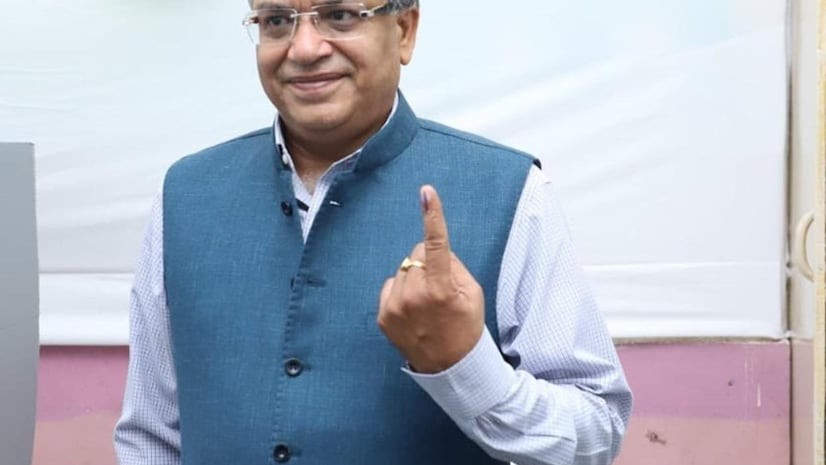
- 22 Feb 2025
In News:
Gyanesh Kumar has been appointed as the new Chief Election Commissioner (CEC) of India, becoming the first to be selected under the new legislative framework — The Chief Election Commissioner and Other Election Commissioners Act, 2023. He succeeds Rajiv Kumar. Simultaneously, Dr. Vivek Joshi, former Haryana Chief Secretary, was appointed as an Election Commissioner.
Constitutional Basis
- Article 324 of the Indian Constitution provides for the Election Commission of India (ECI), consisting of the CEC and such other Election Commissioners as the President may determine.
- It vests the superintendence, direction, and control of elections in the ECI for conducting elections to Parliament, State Legislatures, and for the offices of the President and Vice President.
Earlier Appointment Process
- Governed by convention and the Election Commission (Conditions of Service of Election Commissioners and Transaction of Business) Act, 1991.
- The CEC was appointed by the President on the advice of the Prime Minister, with no formal selection mechanism defined in law.
New Appointment Process (2023 Act)
The Chief Election Commissioner and Other Election Commissioners Act, 2023 introduced a formal selection process:
- Selection Committee:
- Prime Minister (Chairperson)
- A Union Cabinet Minister (nominated by the PM)
- Leader of Opposition (or largest opposition party leader) in the Lok Sabha
- Search Committee:
- Headed by the Cabinet Secretary, this body shortlists eligible candidates.
- Eligibility Criteria:
- Must be a person of integrity
- Must have experience in election management
- Must be or have been a Secretary (or equivalent) to the Government of India
Service Conditions (As per 2023 Act)
- Salary & Status: Equivalent to that of a Cabinet Secretary (earlier: Supreme Court judge).
- Tenure: 6 years or till the age of 65, whichever is earlier.
- Reappointment: Not permitted.
Removal Process
- CEC: Can only be removed in the same manner and on the same grounds as a Supreme Court judge (i.e., by Parliament through impeachment).
- Election Commissioners: Can only be removed on the recommendation of the CEC.
Functions & Powers of CEC
- Conducts elections to the Lok Sabha, Rajya Sabha, State Assemblies, and offices of the President & Vice President.
- Regulates political parties and election funding.
- Enforces the Model Code of Conduct (MCC).
- Maintains and updates electoral rolls and supervises the voter registration process.
- Has the authority to disqualify candidates and cancel elections in case of serious irregularities.
- Advises the President and Governors on election-related matters.
Judicial Context & Controversy
- In the Anoop Baranwal vs Union of India case, the Supreme Court ruled that the independence of the ECI must be preserved and directed that a law be enacted to define the appointment process.
- Until such legislation was passed, the Court had prescribed a selection committee comprising:
- The Prime Minister
- The Leader of Opposition in the Lok Sabha
- The Chief Justice of India (CJI)
- However, the 2023 Act excluded the CJI, replacing the judiciary with another executive appointee, raising concerns about executive dominance.
- Multiple petitions challenging the constitutionality of the Act are pending before the Supreme Court.
Pradhan Mantri Annadata Aay Sanrakshan Abhiyan (PM-AASHA)

- 21 Feb 2025
In News:
Context:
The Government of India has approved the continuation of the PM-AASHA Scheme till 2025–26, aligning with the 15th Finance Commission cycle, to strengthen farmer income security and achieve self-sufficiency in pulses production.
Overview of PM-AASHA Scheme
- Launched by: Ministry of Agriculture & Farmers’ Welfare
- Objective: To ensure remunerative prices to farmers and stabilize market prices of key crops.
- Type: Umbrella scheme combining various price support mechanisms.
Key Components
- Price Support Scheme (PSS)
- Procurement of pulses, oilseeds, and copra at Minimum Support Prices (MSP) through NAFED and NCCF.
- Covers 25% of national production, except for 100% procurement of Tur, Urad, and Masur during 2024–25 and extended for the next four years.
- Procurement is done from pre-registered farmers through State-level agencies.
- Price Deficiency Payment Scheme (PDPS)
- Farmers receive direct payments for the shortfall between the MSP and market price.
- Covers 40% of oilseed production for a duration of four months.
- Price Stabilization Fund (PSF)
- Maintains buffer stocks of pulses and onions.
- Aims to stabilize prices, prevent hoarding, and ensure affordable supply for consumers.
- Market Intervention Scheme (MIS)
- Provides price support for perishable horticultural crops.
- Covers 25% of production with direct financial transfers to farmers, not physical procurement.
Recent Developments (2025)
- Procurement Commitment:The Union Government announced 100% procurement of Tur (Arhar), Urad, and Masur under PSS for 2024–25, extended for four years, to reduce import dependence and promote self-sufficiency.
- Tur Procurement Approval:Union Agriculture Minister Shivraj Singh Chouhan approved procurement of 13.22 Lakh Metric Tonnes (LMT) of Tur for Kharif 2024–25 in 9 states:
Andhra Pradesh, Chhattisgarh, Gujarat, Haryana, Karnataka, Madhya Pradesh, Maharashtra, Telangana, and Uttar Pradesh. - Procurement Progress(as of 15 Feb 2025):
- 0.15 LMT of Tur procured from Andhra Pradesh, Karnataka, Maharashtra, and Telangana.
- 12,006 farmers have benefited so far.
- Procurement in remaining states will commence shortly.
- Central procurement is conducted by NAFED and NCCF.
UNESCO’s “Imagine a World with More Women in Science” Campaign

- 21 Feb 2025
In News:
On February 11, 2025, to mark the 10th anniversary of the International Day of Women and Girls in Science, UNESCO, with support from Canada’s International Development Centre (IDRC), launched the global campaign titled “Imagine a World with More Women in Science.”
Campaign Highlights
- Objective: Promote gender equality in science and innovation by encouraging the active participation and leadership of women in STEMM (Science, Technology, Engineering, Mathematics, and Medicine).
- Social Media Drive: The campaign uses the hashtag #EveryVoiceInScience to amplify diverse voices and encourage global engagement.
- Focus: Emphasizes the real-world impact of gender disparities in science, including missed innovations, biased artificial intelligence, and inequitable scientific opportunities.
Background
- The UN General Assembly (UNGA) declared February 11 as the International Day of Women and Girls in Science in 2015 to foster female participation in scientific research and innovation globally.
Current Status of Women in Science
Global Trends
- Representation: Women comprise only one-third of the global scientific workforce.
- Leadership Gap: Merely 10% of STEM leadership positions are held by women.
India-Specific Data
- STEMM Enrolment: Women account for 43% of enrolment in STEMM disciplines.
- Women Scientists: Only 18.6% of scientists in India are women.
- R&D Projects: About 25% of R&D projects are led by women researchers.
Challenges Faced by Women in Science
Challenge Description
Restrictive Social Norms Traditional gender roles hinder women’s
scientific pursuits.
Lack of Role Models Few visible female leaders discourage young women from
aspiring to scientific careers.
Workplace Inequality Gender biases, hostile work environments, and lack of inclusive
policies create barriers.
Educational Gaps Gender-biased teaching content and insufficient support systems
limit girls’ access to science education.
Recommended Measures
Dismantle Gender Stereotypes
- Remove gender biases from teaching and learning materials.
- Include contributions of female scientists in textbooks with visuals.
- Promote equitable representation of women in boards, panels, and decision-making bodies.
Enhance Visibility of Women Role Models
- Highlight discoveries by female scientists.
- Increase media and curriculum exposure to successful women in science.
Open Educational Pathways
- Promote inclusive teaching practices and gender-neutral curricula.
- Encourage CSR (Corporate Social Responsibility) initiatives to support girls in science education.
Create Inclusive Work Environments
- Enforce policies for diversity, equity, and inclusion.
- Take strong action against gender-based violence, including sexism and harassment in the workplace.
- Advance women into leadership roles in scientific institutions.
mRNA-Based Cancer Vaccine
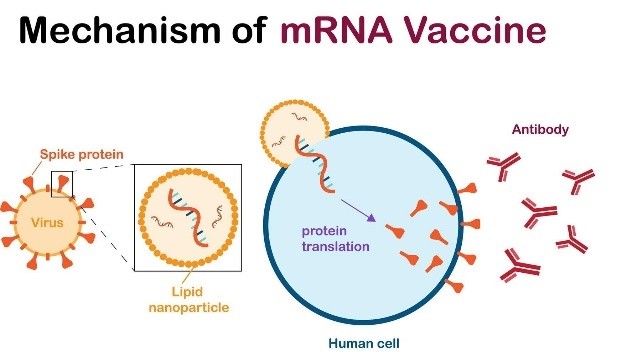
- 21 Feb 2025
In News:
Russia has announced the development of an mRNA-based personalized cancer vaccine, expected to be available free of cost to patients by early 2025. It is being developed under the Russian Ministry of Health, with pre-clinical trials showing promising results in suppressing tumour growth and metastasis.
What is an mRNA-Based Cancer Vaccine?
- mRNA (Messenger RNA) vaccines deliver genetic instructions to the body’s cells to produce antigens—proteins that trigger an immune response.
- In the case of cancer, these vaccines train the immune system to recognize and destroy tumor-specific antigens, thereby attacking cancer cells.
- Unlike conventional vaccines, these are therapeutic, not preventive, and are used in existing cancer patients.
How Does It Work?
- The vaccine prompts the body to produce proteins that mimic tumor markers.
- These markers stimulate the immune system to target and destroy cancer cells.
- The treatment is personalized, with the mRNA sequence tailored to match the unique antigens of a patient’s tumour, enhancing precision and efficacy.
- It can potentially target multiple antigens simultaneously, unlike standard mRNA vaccines such as those for COVID-19.
Advantages Over Conventional Therapies
- Selective Action: Targets only cancer cells, minimizing damage to healthy tissue.
- Fewer Side Effects: Compared to chemotherapy, the side effects are significantly reduced.
- Customizable: Can be adapted to target various cancers through tumor-specific markers.
- Boosts Immunity: Enhances the body’s natural defense mechanisms for long-term protection.
mRNA Technology – Core Concepts
- mRNA is a single-stranded RNA transcribed from DNA.
- It delivers genetic instructions to ribosomes (protein factories) in cells to produce specific proteins.
- In mRNA vaccines, this mechanism is harnessed to make the body generate target antigens, which the immune system learns to combat.
India and mRNA Vaccines
- India has approved two mRNA COVID-19 vaccines developed by Gennova Biopharmaceuticals with DBT-BIRAC support:
- GEMCOVAC-OM(Omicron-specific)
- GEMCOVAC-19
- Features include needle-free delivery and thermostability, marking India’s entry into mRNA-based immunotherapy platforms.
Cautions and Limitations
- Not Preventive: These are not preventive like HPV or Hepatitis B vaccines, which protect against cancers linked to viruses.
- Limited Data: Russian vaccine data is not yet publicly available; clinical validation is pending.
- Not Universally Effective: Immunotherapy may not work for all types or stages of cancer.
- Time-Consuming Trials: New treatments must undergo phased trials, often spanning years, before general approval.
AI-Powered Surveillance in Similipal Tiger Reserve
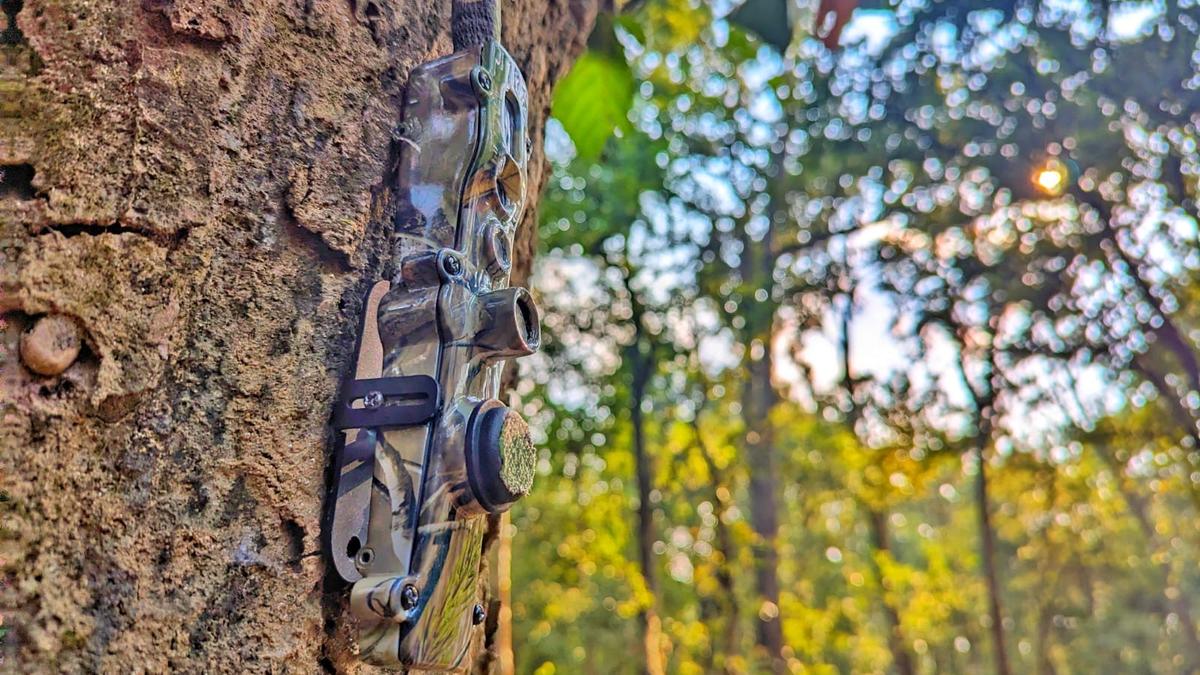
- 21 Feb 2025
In News:
The Similipal Tiger Reserve in Odisha has seen a significant drop in poaching activities following the deployment of TrailGuard AI-enabled surveillance cameras. These advanced systems are helping protect both forest personnel and wildlife by providing real-time alerts and enhancing enforcement actions.
About TrailGuard AI System
- Developed by: Nightjar Technologies, Gurgaon.
- Design:
- Two-part system: a pen-sized camera unit and a notepad-sized battery/communication unit connected via a 2-metre cable.
- Camouflaged and compact, reducing chances of being detected or stolen.
- Operation:
- Operates in low-power mode by default, switches to high-power mode upon sensing movement.
- Uses on-device AI inference to identify object classes (e.g., humans, animals, vehicles).
- Sends alerts via cellular network within 30–40 seconds to a central control room.
- Battery life: 6 months to 1 year.
- Cost: ?50,000–53,000 per unit.
Impact and Achievements
- Installed: 100–150 AI-enabled cameras in Similipal.
- In 10 months, led to:
- 96 poachers arrested
- 86+ country-made guns seized
- 40+ arrests in December 2024 alone
- Enabled quick house raids and identifications using photographic evidence.
- Enabled one conviction within six months, with more expected.
Integrated Enforcement System
- Real-time alerts displayed on a central control room screen.
- Information shared swiftly via WhatsApp groups and VHF radio.
- Ground teams rely on human intelligence sources (including undercover staff) to identify suspects.
- Raids and arrests are executed only after 100% identity confirmation, ensuring due process.
Advantages of the System
- Enhances forest ranger safety.
- Enables targeted and proactive patrolling.
- Effective in challenging terrains with minimal maintenance.
- Also used to monitor wildlife, including profiling of tuskers.
- Functions as an anti-poaching as well as human-wildlife conflict mitigation tool.
Wider Adoption and Future Plans
- Apart from Similipal, TrailGuard AI has been deployed at:
- Kanha Tiger Reserve, Madhya Pradesh (20 cameras)
- Dudhwa National Park, Uttar Pradesh (10 cameras)
- Total: Active in 14+ sites across five states
- Planned expansion to other protected areas in Odisha.
Community Sensitivity and Tribal Engagement
- Similipal is surrounded by tribal communities, where hunting has traditional roots.
- Increased surveillance has caused concerns over restricted forest access for collecting firewood and non-timber forest products.
- The forest department is:
- Holding awareness meetings in local languages.
- Exploring safe and non-intrusive access solutions for villagers.
- Ensuring that enforcement doesn’t indiscriminately impact local livelihoods.
Conservation Significance
- Demonstrates the fusion of technology with conservation.
- Aligns with India’s broader environmental goals under:
- Project Tiger
- National Wildlife Action Plan
- Digital India initiatives in conservation.
Exercise Komodo

- 21 Feb 2025
In News:
The Indian Navy's platforms—INS Shardul, an amphibious warfare ship, and the P-8I Long Range Maritime Surveillance Aircraft—participated in the International Fleet Review (IFR) 2025 and the 5th edition of the Multilateral Naval Exercise Komodo held in Bali, Indonesia, from 15 to 22 February 2025.
International Fleet Review (IFR) 2025
- IFR 2025 is a prestigious multinational naval event reviewed by the President of Indonesia.
- Participating nations showcased naval assets including warships, helicopters, and maritime aircraft.
- The Indian Navy took part in:
- International Maritime Security Symposium
- Tactical floor games
- City parade
- Coral and mangrove plantation
- Beach cleaning activities
- Baby turtle release, promoting environmental and maritime sustainability.
Exercise Komodo 2025
- Initiated in 2014, Exercise Komodo is a non-combat multilateral naval exercise hosted by the Indonesian Navy.
- The 2025 edition had the theme: "Maritime Partnership for Peace and Stability".
- Objectives:
- Promote maritime cooperation
- Enhance interoperability
- Foster regional security cooperation
- Key Features:
- Participation from 39 countries
- Involvement of 34 foreign and 18 Indonesian Navy warships
- Included:
- Naval exercises
- Officer exchange forums
- Bilateral naval meetings
- Defense exhibition
- Cultural parades
Strategic Context and Bilateral Engagements
- The participation builds upon the Indian Navy’s involvement in the La Pérouse exercises in Indonesia (January 2025) involving INS Mumbai and a P-8I aircraft.
- It coincided with the visit of Admiral Muhammad Ali, Chief of Staff of the Indonesian Navy, to India during the Republic Day 2025, accompanying President Prabowo Subianto as the Chief Guest.
Significance for India
- The participation reaffirms India’s commitment to SAGAR (Security and Growth for All in the Region).
- It strengthens India-Indonesia defense ties and underscores India's proactive role in regional maritime diplomacy and environmental stewardship.
Gravehawk Hybrid Air Defense System

- 20 Feb 2025
In News:
The Gravehawk is a newly developed mobile surface-to-air missile (SAM) system, introduced by the United Kingdom in collaboration with Denmark, to bolster Ukraine's defenses against Russian aerial threats. This innovative hybrid system exemplifies the modern trend in NATO of repurposing existing missile technology to build flexible, cost-effective, and rapidly deployable air defense platforms.
Overview and Development
- The Gravehawk system is designed to counter short-range aerial threats such as drones, cruise missiles, and low-flying aircraft.
- It combines Western and Soviet-era missile technologies, providing Ukraine with a unique edge in a contested aerial environment.
- The United Kingdom, in partnership with Denmark, is actively delivering these systems to Ukraine, with 15 additional units expected in the coming months.
- The cost per system is approximately USD 1.25 million, with Denmark covering 50% of the expense.
Key Features and Technical Capabilities
- Missiles Used: The system utilizes infrared-guided missiles including the AIM-132 ASRAAM (Advanced Short Range Air-to-Air Missile) and the Soviet-origin R-73 (AA-11 Archer).
- Guidance System: Both missiles employ passive infrared (IR) seekers, allowing them to track heat signatures of targets without emitting radar signals, thereby reducing vulnerability to electronic warfare (EW) detection.
- Speed and Range: Missiles can reach speeds of up to Mach 2.5 and engage targets at distances of approximately 12 miles (about 19 km).
- R-73 Specifics: Originally developed for close-range dogfights, the R-73 is highly maneuverable, capable of tracking targets up to 40 km ahead and 300 meters behind, with off-boresight targeting up to 40 degrees.
- Mobility: Mounted on all-terrain Drops vehicles, the system offers rapid ground mobility and deployment flexibility.
- Containerized Launch Platform: Housed in ISO-standard shipping containers, the system’s roof rolls back to expose two missile rails—repurposed from Soviet-era fighters like the Sukhoi Su-27.
- Crew and Operation: Operated by a five-member crew, the system incorporates electro-optical and infrared targeting cameras, enabling remote operation and safe standoff missile launches.
Strategic Relevance for Ukraine
- Ukraine’s acquisition of the Gravehawk system marks a significant advancement in its air defense capabilities, particularly in the face of persistent Russian air and missile attacks.
- It enhances short-range interception capacity, allows for quick reaction deployment, and reduces dependence on continuous NATO resupplies. Additionally, the system’s use of widely available R-73 missiles ensures operational sustainability.
- The Gravehawk is part of a broader effort to field "hybrid systems", where older missile stocks are integrated into modern platforms.
- Other such initiatives include FrankenSAM programs developed by the U.S. and UK, where systems like ASRAAM have been adapted to ground-based launchers.
- Ukraine has also employed R-73 missiles on drone boats and unmanned surface vessels to target Russian air assets, showcasing the multi-domain applicability of these munitions.
Prime Minister’s Yoga Awards 2025

- 20 Feb 2025
In News:
The Ministry of Ayush has officially opened nominations for the Prime Minister’s Yoga Awards 2025, which will be conferred on the occasion of the International Day of Yoga (IDY) 2025. These prestigious awards aim to honour individuals and organizations that have made exceptional and sustained contributions to the promotion and development of Yoga at both national and international levels.
Background and Objective
Instituted by the Government of India and endorsed by the Hon’ble Prime Minister, the awards recognize Yoga’s vital role in:
- Health promotion
- Disease prevention
- Management of lifestyle-related disorders
The initiative reflects the government’s broader vision to acknowledge and encourage meaningful contributions in advancing Yoga as a holistic system of well-being and preventive healthcare.
Award Categories and Benefits
The awards will be presented in the following four categories:
- National Individual
- National Organization
- International Individual
- International Organization
Each awardee will receive:
- A Trophy
- A Certificate of Recognition
- A Cash Prize of ?25 lakh
Eligibility Criteria
- Individual applicants must be 40 years or older.
- They should possess a minimum of 20 years of committed work in promoting Yoga.
- Organizations must have a proven track record in the field of Yoga development and outreach.
Applicants or nominees can apply for only one category (either National or International) in a given year. Applications can be submitted directly by individuals/entities or through nominations made by recognized Yoga institutions.
Application and Submission Process
- Nominations and applications are to be submitted through the MyGov platform:
https://innovateindia.mygov.in/pm-yoga-awards-2025/ - The link is also accessible on the Ministry of Ayush website and those of its autonomous bodies.
- The deadline for submission is March 31, 2025.
Selection Procedure
The award process involves two key stages:
- A Screening Committee formed by the Ministry of Ayush will evaluate all entries and recommend a maximum of 50 nominations per category.
- These shortlisted names will be reviewed by a high-level Evaluation Jury comprising eminent personalities from diverse fields, which will serve as the final decision-making body.
Significance of the Initiative
The Prime Minister’s Yoga Awards not only celebrate excellence in Yoga but also further the objectives of initiatives like Fit India Movement, Ayushman Bharat, and the mainstreaming of traditional Indian wellness systems.
The awards are a key element of the Ministry of Ayush’s broader mandate to integrate traditional systems such as Ayurveda, Yoga & Naturopathy, Unani, Siddha, Sowa-Rigpa, and Homeopathy into the healthcare ecosystem of India.
India–U.S. Underwater Domain Awareness Cooperation
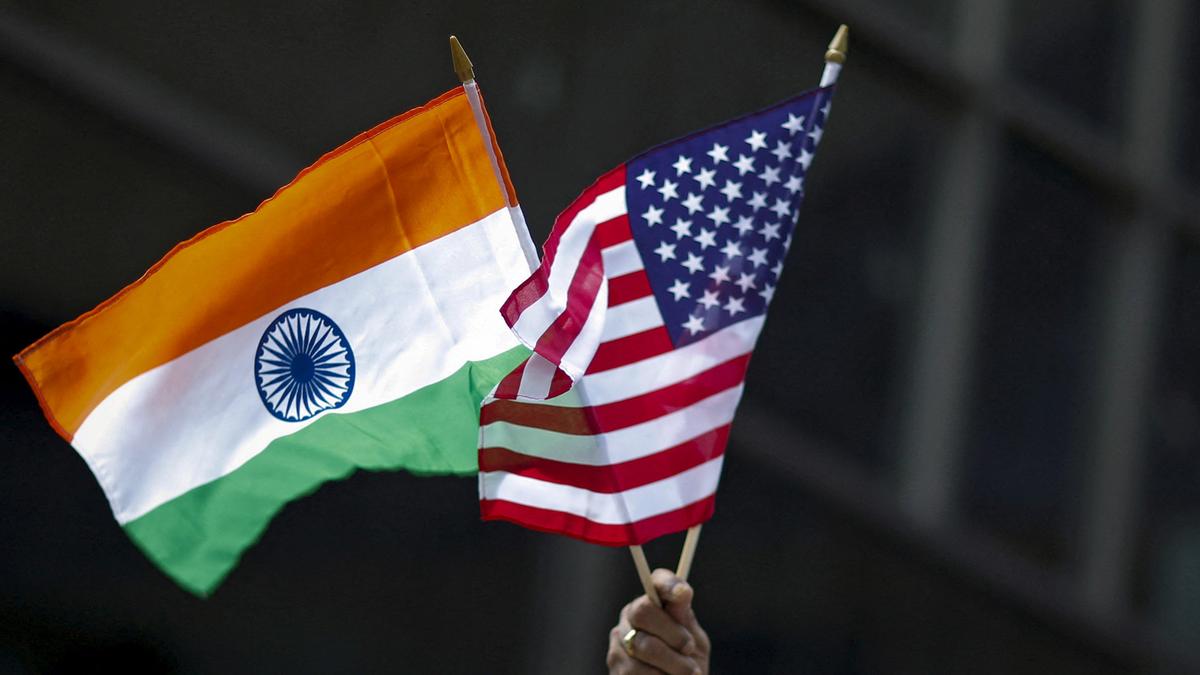
- 20 Feb 2025
In News:
India and the United States have deepened their defense partnership by launching the Autonomous Systems Industry Alliance (ASIA), a landmark initiative focused on co-producing Underwater Domain Awareness (UDA) technologies in India.
Understanding Underwater Domain Awareness (UDA)
- UDA refers to the ability to monitor, detect, and evaluate activities beneath the surface of oceans and seas. It plays a vital role in ensuring maritime security, enabling anti-submarine warfare (ASW), managing marine resources, responding to disasters, and protecting the underwater environment.
- In the backdrop of China’s rapid naval expansion and its increasing footprint in the Indian Ocean Region (IOR), enhancing UDA has become imperative for India, both at the bilateral level and as part of the Quad framework (India, U.S., Japan, and Australia).
Strategic Significance and Geopolitical Relevance
The UDA collaboration marks a significant step in Indo-U.S. strategic relations. As the maritime domain becomes increasingly contested, especially in the Indo-Pacific, India’s need for robust submarine detection, surveillance, and underwater intelligence capabilities has become critical. The joint initiative aligns with broader strategic goals such as:
- Enhancing Quad cooperation to maintain a free, open, and secure Indo-Pacific.
- Countering threats arising from Chinese submarine activities and naval assertiveness.
- Enabling shared maritime patrols and airlift capacity for disaster response across the region.
Key Technologies Identified for Co-Production
Several high-end underwater surveillance systems have been identified for co-production or co-development in India under the ASIA framework:
- Sea Picket: An autonomous sonar surveillance platform developed by Thayer Mahan.
- Wave Glider Unmanned Surface Vehicles (USVs): Discussions are underway between Boeing’s Liquid Robotics and Sagar Defence Engineering for the co-production of 60 platforms in India.
- Low-Frequency Active Towed Sonar: Negotiations involve L3 Harris and Bharat Electronics Limited (BEL) for co-development.
- Multistatic Active (MSA) Sonobuoys: A sophisticated submarine-tracking technology, to be co-produced in India by Ultra Maritime and Bharat Dynamics Limited (BDL), with a production line expected by 2027.
- Large-Diameter Autonomous Undersea Vehicles: Produced by Anduril, these offer deep-sea monitoring capabilities.
- Triton Autonomous Underwater and Surface Vehicle: Developed by Ocean Aero, integrates underwater and surface operations.
Existing and Emerging ASW Platforms
India’s anti-submarine warfare capabilities have already been bolstered through U.S. defense acquisitions, including:
- 12 P-8I Poseidon maritime patrol aircraft currently in service.
- 24 MH-60R Multi-Role Helicopters, being inducted to enhance ASW and surveillance.
- 15 MQ-9B Sea Guardian UAVs, part of a 31-unit contract with deliveries beginning from 2029.
- An additional six P-8I aircraft were cleared during the recent bilateral talks.
These platforms significantly improve maritime interoperability among Quad nations and provide India with a strategic edge in underwater operations.
Make-in-India and Technological Sovereignty
The UDA initiative strongly supports India’s Atmanirbhar Bharat vision by fostering indigenous manufacturing of advanced underwater systems. It introduces a first-of-its-kind co-production framework in sensitive defense technologies, thus catalyzing innovation and industrial capability within the Indian defense sector.
The initiative also aims to strengthen logistics, intelligence-sharing, and force mobility between the Indian and U.S. armed forces. Enhanced training, joint operations, and technological exchanges will help sustain forward deployments and enable humanitarian and disaster relief missions across the Indo-Pacific.
Exercise Dharma Guardian 2025
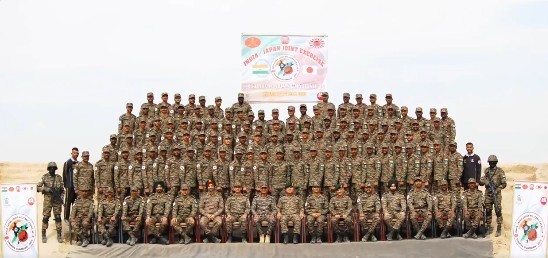
- 20 Feb 2025
In News:
The 6th edition of Exercise Dharma Guardian, a joint annual military exercisealternately hosted in India and Japan since 2018is scheduled from February 25 to March 9, 2025, at Mount Fuji, Japan.
Key Highlights:
Objectives:
- Strengthen Bilateral Defence Relations: Enhances military diplomacy under the India–Japan Special Strategic and Global Partnership.
- Promote Interoperability: Develops joint operational capabilities and tactical synergy in line with UN peacekeeping mandates (Chapter VII).
- Urban and Semi-Desert Warfare: Trains troops in counter-terrorism operations and urban combat scenarios.
- Regional Stability: Supports the Indo-Pacific security architecture and complements Quad defence objectives (India, Japan, US, Australia).
Key Features of Dharma Guardian 2025
- Advanced Tactical Training: Close-quarter battle drills, live-fire exercises, battlefield medical evacuation.
- Joint Counter-Terror Operations: Conducted under UN charter guidelines for multinational cooperation.
- 48-hour Validation Exercise: Simulated real-time combat for assessing operational readiness and coordination.
- ISR and Tactical Mobility Drills: Involves establishing temporary operating bases, ISR (Intelligence, Surveillance, Reconnaissance) grids, mobile vehicle checkpoints, and heliborne insertions.
- House Intervention & Search Operations: Practical training for securing urban areas against militant threats.
- Weapons & Equipment Display: Demonstrates India’s growing defence manufacturing under the Atmanirbhar Bharat initiative.
Mount Fuji – Host Site
- Geographical Significance: Japan’s highest peak at 3,776.24 meters, located 100 km southwest of Tokyo.
- Cultural Importance: Recognized as a UNESCO World Heritage Site (2013) and revered as one of Japan’s “Three Holy Mountains.”
- Training Terrain: Its stratovolcanic landscape provides a realistic backdrop for high-altitude and rugged terrain operations.
Related India-Japan Military Exercises
India and Japan conduct a wide spectrum of bilateral and multilateral defense exercises across all services:
Exercise Name Service Branch Focus Area
Dharma Guardian Army Land-based counter-terror and urban warfare
JIMEX Navy Naval interoperability and maritime security
Malabar (Quad) Navy (Multilateral) Naval drills with US and Australia
Veer Guardian Air Force Air combat tactics and coordination
ShinyuuMaitri Air Force Air mobility and humanitarian operations
Aero India 2025
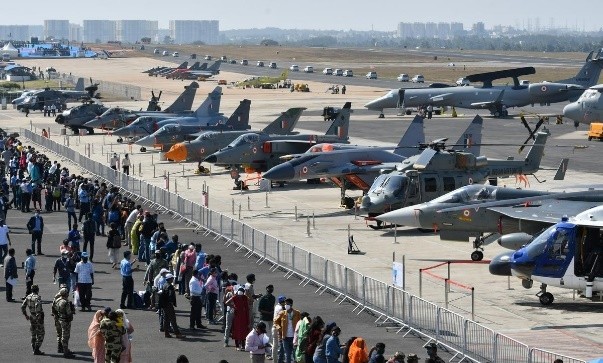
- 20 Feb 2025
In News:
Aero India 2025, the 15th edition of Asia's largest biennial airshow, is scheduled to take place from February 10 to 14, 2025, at the Air Force Station, Yelahanka, in Bengaluru, Karnataka.
Organized by the Defence Exhibition Organisation under the Ministry of Defence, with support from HAL, DRDO, and the Indian Air Force, the event showcases India's growing prowess in aerospace, aviation, and defense technologies.
Key Highlights:
Edition: 15th (First held in 1996; originally Avia India in 1993)
Theme: “The Runway to a Billion Opportunities”
Conclave Theme: “BRIDGE – Building Resilience through International Defence and Global Engagement”
Objectives and Significance
- Promote Indigenous Manufacturing: In alignment with ‘Make in India’ and ‘Atmanirbhar Bharat’, the show promotes domestic aerospace and defense production.
- Showcase Technological Advancements: Cutting-edge systems including fighter jets, helicopters, UAVs, and AI-integrated defense solutions will be exhibited.
- Encourage Global Partnerships: Facilitates joint ventures, MoUs, and technology transfers between Indian and foreign defense firms.
- Boost Strategic Diplomacy: A platform for global defense ministers, CEOs, and military leaders to foster bilateral and multilateral defense ties.
- Stimulate Investment: Attracts FDI and international contracts in India’s defense sector.
Key Events
- Live Aerial Displays: Aerobatic performances by combat aircraft, helicopters, and elite teams like Surya Kiran.
- Defense Ministers’ Conclave: Deliberations on enhancing international defense cooperation.
- CEO Roundtable: Industry leaders discuss emerging trends and investment prospects.
- Manthan/iDEX Pavilion: Showcasing start-up innovations in defense and aerospace.
- India Pavilion: A dedicated zone for indigenous defense production and capabilities.
- International Seminar (Feb 8–9): Focused on Futuristic Aerospace Technologies and related R&D challenges.
Strategic Role of Aero India
Aero India plays a pivotal role in:
- Supporting Medium Multi-Role Combat Aircraft (MMRCA) procurements.
- Demonstrating India's readiness as a global defense manufacturing hub.
- Enhancing India’s geopolitical standing by fostering defense diplomacy through multilateral engagement.
Climate Risk Index 2025
- 19 Feb 2025
In News:
- The Climate Risk Index (CRI) 2025, published by the international environmental think tank Germanwatch, ranks countries based on their vulnerability to extreme weather events, assessing both human and economic losses due to climate-induced disasters.
- The index, which has been released annually since 2006, covers a 30-year period, evaluating the impact of extreme weather events in terms of economic losses, fatalities, and the number of affected people.
Key Findings:
- Global Impact: From 1993 to 2022, more than 9,400 extreme weather events occurred globally, resulting in 765,000 fatalities and USD 4.2 trillion in economic losses. Heatwaves, droughts, and floods were the leading causes of fatalities and displacement, with heatwaves alone claiming 61,778 lives (83% of fatalities) in 2022. Droughts affected the largest number of people, with 59% of the global population impacted during the past three decades.
- India's Position: India ranks as the 6th most affected country in the world by climate change between 1993 and 2022, suffering significant losses. During this period, the country experienced over 400 extreme weather events, including floods, heatwaves, cyclones, and droughts, causing a loss of USD 180 billion in economic damages and leading to at least 80,000 fatalities (10% of global deaths).
Some notable extreme weather events include:
-
- Cyclones: Gujarat (1998), Odisha (1999), Hudhud (2014), and Amphan (2020).
- Floods: Uttarakhand (2013), Jammu and Kashmir (2014), and Kerala (2018).
- Heatwaves: Intense temperatures exceeding 50°C in 1998, 2002, 2003, and 2015.
Methodology of the Climate Risk Index
The CRI assesses the impact of extreme weather events across three hazard categories:
- Hydrological (floods, landslides),
- Meteorological (storms, cyclones),
- Climatological (heatwaves, droughts).
The six key indicators used for the ranking are:
- Economic loss
- Fatalities
- Affecting population, assessed in both absolute and relative terms.
Climate Risk and Its Implications for India
India’s vulnerability to climate change is highlighted by frequent and intense extreme weather events. The country faces risks from:
- Floods: Regular heavy monsoons lead to significant displacement and damage to infrastructure and agriculture.
- Cyclones: Rising sea levels and warming oceans increase the frequency and intensity of cyclones.
- Heatwaves: India experiences rising temperatures, with heatwaves becoming more intense, contributing to health crises.
- Droughts: A growing concern, affecting agriculture and water resources.
Additionally, the Asia-Pacific Climate Report 2024 projects that India may face a 24.7% GDP loss by 2070 due to climate change impacts, driven by rising sea levels and decreasing labor productivity.
Global Challenges in Climate Change Mitigation
- Historical Responsibility vs. Future Emissions: Developed nations, despite having contributed more to global emissions historically, are pressuring emerging economies like India to take greater responsibility for climate action. This has led to tensions over burden-sharing and the need for climate finance.
- Global Temperature Breach: In 2024, the world breached the 1.5°C threshold for a full year, highlighting the inadequacy of current mitigation efforts. Projections indicate a global temperature increase of 2.6-3.1°C by 2100 if current trends continue.
- Weak Commitments and Insufficient Finance: Many countries have not updated their Nationally Determined Contributions (NDCs), and the USD 300 billion annual funding promised for developing nations is insufficient to meet climate adaptation and mitigation needs.
India's Climate Adaptation Challenges and Suggestions
India faces several climate adaptation challenges, including inadequate infrastructure, insufficient funding, and a lack of robust policy frameworks for disaster risk management. To enhance adaptation efforts, the following measures are suggested:
- Enhanced Climate Finance: Developing countries need greater financial and technical support to manage and adapt to climate-induced losses.
- Strengthening Mitigation Efforts: Nations, including India, must scale up their NDCs to restrict global warming to 1.5°C or lower.
- Accountability of High-Income Countries: Developed nations must expedite mitigation actions and increase financial contributions to support climate-vulnerable countries like India.
National Skill Development Corporation (NSDC)
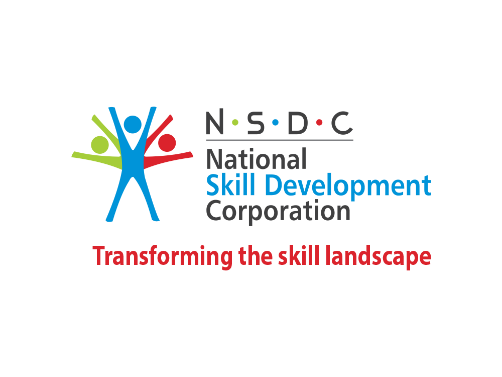
- 19 Feb 2025
In News:
The National Skill Development Corporation (NSDC) has announced plans to establish 50 Future Skills Centres (FSCs) and 10 NSDC International Academies to enhance skill development and improve workforce readiness in India. This initiative aims to address the country's growing demand for skilled professionals, particularly in emerging technologies and international markets.
About NSDC
- NSDC is a not-for-profit public limited company set up to promote skill development across India.
- It operates under the Ministry of Skill Development & Entrepreneurship (MSDE).
- Established on July 31, 2008, NSDC was founded as a Public-Private Partnership (PPP) under Section 25 of the Companies Act, 1956 (now Section 8 under the 2013 Act).
- The corporation operates with a 49% government stake and 51% private sector participation, ensuring a balanced approach to skill development through public and private sector collaboration.
Key Objectives of NSDC
- Bridging the Skill Gap: NSDC aims to fill the gap between industry requirements and the available workforce by providing industry-relevant training. This enhances workforce employability and supports the growth of the Indian economy.
- Financial Support for Enterprises: NSDC provides funding and concessional loans to enterprises, start-ups, and training organizations to expand their operations and develop a skilled workforce.
- Skilling the Workforce for Emerging Technologies: The corporation focuses on upskilling individuals in emerging technologies to make them market-ready.
Key Functions of NSDC
- Skill Development & Training: NSDC provides vocational training and certification across emerging technologies to align the workforce with current industry needs, ensuring that individuals are equipped with the necessary skills to succeed in the job market.
- Apprenticeship & Job Training: Under the National Apprenticeship Promotion Scheme (NAPS), NSDC trains around 5 million apprentices by disbursing ?100,250 million for skill-based learning, giving them hands-on experience and industry exposure.
- Digital & Remote Skilling: Through the Skill India Digital Hub (SIDH), NSDC offers over 7,100 courses in 23 languages, catering to 30 crore candidates. These online courses provide accessibility to skill development programs across the country, particularly for individuals in remote and rural areas.
- Job & Career Support: NSDC runs JobX, a platform that connects job seekers with potential employers. This platform offers services such as resume building, career coaching, and placement assistance, having already supported 4 million candidates in securing jobs.
New Initiatives by NSDC
To further strengthen India’s skill ecosystem, NSDC is establishing 50 Future Skills Centres (FSCs) and 10 NSDC International Academies. These initiatives will focus on:
- Future Skills Centres: These centers will offer training in emerging fields such as artificial intelligence, data science, cybersecurity, and robotics, ensuring that India's workforce is prepared for future job markets.
- International Academies: The academies will focus on global skill standards and international certifications, enhancing the employability of Indian workers in global markets.
Gulf of Eilat
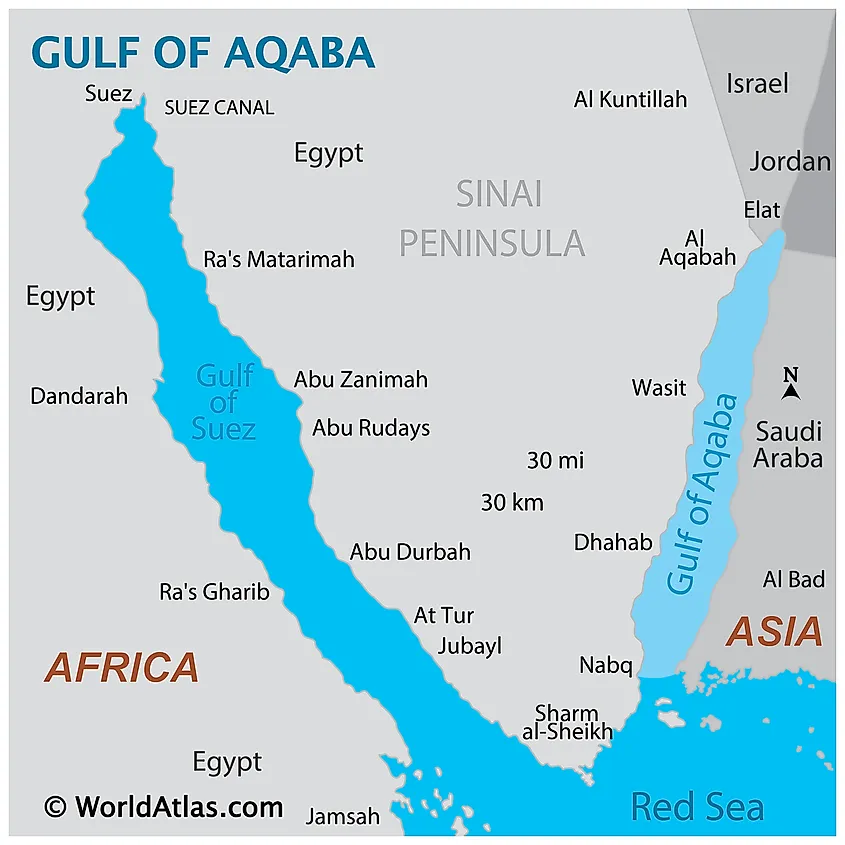
- 19 Feb 2025
In News:
A new study has revealed that the coral reefs in the Gulf of Eilat (also known as the Gulf of Aqaba) faced a 3,000-year growth shutdown due to global cooling. However, these reefs later recovered naturally from deeper waters, demonstrating resilience in the face of environmental changes.
About the Gulf of Eilat (Gulf of Aqaba)
- Location: The Gulf of Eilat is a northern extension of the Red Sea, positioned east of the Sinai Peninsula and west of the Arabian Peninsula. It is strategically significant and is also known as the Gulf of Aqaba.
- Neighbouring Nations: The Gulf shares its coastline with four countries: Egypt, Israel, Jordan, and Saudi Arabia.
- Geographical Features:
- The Gulf includes important cities like Taba (Egypt), Eilat (Israel), and Aqaba (Jordan), all located at the Gulf’s northernmost point.
- It has a maximum depth of 1,850 meters, making it much deeper than the adjacent Gulf of Suez.
- The Gulf forms the southern end of the Dead Sea Transform, a significant tectonic fault zone, contributing to its unique geological and environmental features.
- Coral Ecosystem: The Gulf of Eilat is home to the world’s northernmost coral reefs. Despite facing various environmental challenges, these reefs have shown remarkable resilience over the years, highlighting their ability to adapt to changing conditions.
Environmental Challenges and Recovery
- The 3,000-year growth shutdown of the coral reefs in the Gulf of Eilat was primarily driven by global cooling. This climatic phenomenon significantly impacted the growth of the reefs, causing a temporary halt in their development. However, the coral ecosystems in the Gulf have since recovered naturally, drawing from deeper waters to rebuild and thrive once again.
- This recovery underscores the resilience of coral ecosystems despite adverse environmental conditions. It also provides valuable insights into how these ecosystems can recover when given the opportunity, even after significant disruptions caused by global climate changes.
Implications for Coral Reef Conservation
- The study's findings emphasize the importance of understanding the adaptive capacity of coral reefs, which are among the most vulnerable ecosystems to climate change.
- The ability of coral reefs in the Gulf of Eilat to recover after a prolonged period of cooling demonstrates that marine ecosystems can endure long-term environmental stress if they are allowed to regenerate naturally.
- This has significant implications for global coral conservation efforts, which must focus on creating conditions that allow reefs to adapt and recover from environmental stresses, including global warming, ocean acidification, and pollution.
- The Gulf of Eilat’s coral reefs provide an important case study for understanding ecological resilience and the potential for natural recovery in marine ecosystems.
NAMASTE Scheme
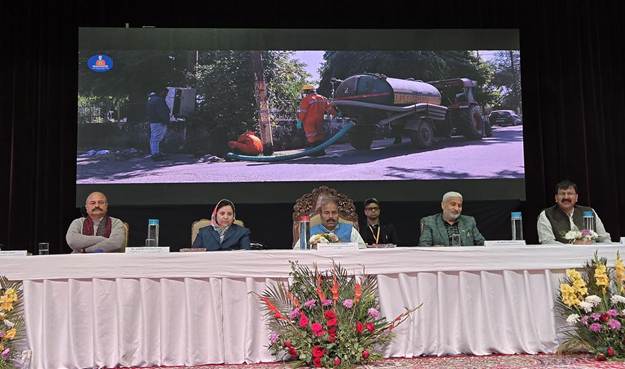
- 19 Feb 2025
In News:
The National Action for Mechanized Sanitation Ecosystem (NAMASTE) scheme, launched by the Government of India, aims to empower sanitation workers, particularly Sewer and Septic Tank Workers (SSWs), also known as SafaiMitras.
Key Highlights:
- It focuses on ensuring their dignity, safety, and economic empowerment, while promoting the mechanization of sanitation processes.
- The scheme is designed to address the challenges faced by these workers, who are often exposed to hazardous conditions.
Objectives of the NAMASTE Scheme
The primary objectives of the NAMASTE scheme include:
- Formalization of sanitation work and enhancing occupational safety.
- Promotion of mechanized cleaning techniques to reduce manual interventions.
- Providing personal protective equipment (PPE) and other safety devices to workers.
- Ensuring economic and social empowerment of sanitation workers.
Implementing Agencies and Timeline
- The NAMASTE Scheme is implemented by the Ministry of Social Justice and Empowerment (MoSJE) and the Ministry of Housing and Urban Affairs (MoHUA).
- The scheme is executed by the National SafaiKaramcharis Finance and Development Corporation (NSKFDC), under MoSJE.
- The scheme is scheduled for implementation from FY 2023-24 to 2025-26, with a target group comprising sewer workers, septic tank workers, and waste pickers (the latter being added in 2024).
Key Initiatives Under NAMASTE
- Distribution of PPE Kits: Under the scheme, PPE kits are provided to sanitation workers to safeguard them from health hazards, especially while working in unsafe environments like sewer lines and septic tanks. These kits include masks, gloves, goggles, face shields, gowns, and shoe covers.
- Ayushman Health Cards: Ayushman Bharat Pradhan Mantri Jan Arogya Yojana (AB-PMJAY) health cards are distributed to SSWs under the scheme. These cards enable workers to access cashless healthcare at empaneled hospitals, ensuring that sanitation workers receive timely medical attention without financial burden.
- Capacity Building and Training: The scheme promotes capacity building for SSWs through training programs on safety protocols, mechanized cleaning processes, and the use of modern sanitation technologies. This helps improve the efficiency and safety of their work, while also reducing manual handling.
- Promoting Mechanization: To reduce the hazardous practice of manual scavenging, the scheme focuses on providing mechanized equipment to enhance sanitation operations and create safer working conditions for workers.
Surge in Colorectal Diseases in India
- 19 Feb 2025
In News:
In recent years, India has witnessed a marked increase in colorectal diseases, including colorectal cancer, Inflammatory Bowel Disease (IBD), Irritable Bowel Syndrome (IBS), and other related disorders. This surge is closely linked to urbanization, dietary transitions, sedentary lifestyles, and improved diagnostic practices.
What are Colorectal Diseases?
Colorectal diseases affect the colon and rectum and encompass a spectrum of conditions:
- Colorectal Cancer: Originates from polyps in the colon or rectum. If untreated, these polyps can turn malignant. The incidence of colorectal cancer is rising rapidly in Indian urban centers, now ranking among the top cancers in cities.
- Inflammatory Bowel Disease (IBD): A chronic condition involving inflammation of the digestive tract, especially the colon and small intestine. Subtypes include Crohn’s disease and ulcerative colitis. Once rare in India, IBD is now on the rise due to industrialization, Western diets, and enhanced medical diagnostics.
- Irritable Bowel Syndrome (IBS): A non-inflammatory, functional bowel disorder marked by abdominal pain, bloating, and altered bowel habits (constipation or diarrhea) without visible bowel damage. IBS is highly prevalent in India.
- Diverticular Disease: Characterized by the formation of small pouches (diverticula) in the colon wall. Inflammation or infection of these pouches leads to complications and discomfort.
- Hemorrhoids and Anal Fissures: Swollen veins or tears in the rectal region, leading to pain, bleeding, and itching—often caused by hard stools or chronic constipation.
Why are these diseases increasing?
- Dietary Shifts: Increased intake of processed foods, red meat, and low-fiber diets (lacking fruits and vegetables) have significantly raised the risk of colorectal cancer and other digestive disorders.
- Physical Inactivity: Sedentary behavior, especially in urban populations, heightens susceptibility to these conditions.
- Rising Obesity: Obesity, closely associated with lifestyle disorders, is a contributing factor for colorectal cancer and IBS.
- Ageing Population: Risk increases with age, and India’s growing elderly demographic intensifies disease burden.
- Genetic and Lifestyle Factors: A family history of colorectal conditions, coupled with habits like smoking and alcohol consumption, further elevate risk levels.
- Gut Microbiota Disruption: Imbalance in gut bacteria and possible infections are emerging as factors in the etiology of IBD; ongoing research aims to establish clearer links.
Common Symptoms
- Persistent changes in bowel habits: constipation, diarrhea, or narrow stools.
- Rectal bleeding: presence of bright red or dark blood in the stool.
- Abdominal pain, bloating, or cramps.
- Unexplained weight loss.
- Chronic fatigue and weakness.
- Sensation of incomplete bowel emptying.
Diagnosis
- Physical Examination and clinical history evaluation.
- Stool Tests for blood, infections, or abnormalities.
- Colonoscopy (gold-standard diagnostic tool) to inspect the colon and collect biopsies.
- Sigmoidoscopy for lower colon and rectum.
- Imaging: CT, MRI, or X-rays to detect abnormalities.
- Blood Tests to assess inflammation and exclude other conditions.
Treatment Modalities
- Medication: Anti-inflammatory drugs (for IBD), antibiotics, pain relief, and symptom-specific treatments.
- Lifestyle Interventions: High-fiber diets (for IBS, diverticulitis), regular physical activity, and stress reduction.
- Surgery: Required in advanced cases of colorectal cancer or severe IBD/diverticular disease.
- Chemotherapy and Radiation Therapy: Used post-operatively or in advanced malignancies.
- Targeted Biological Therapies: Including monoclonal antibodies for immune modulation in IBD.
Mount Etna Eruption 2025
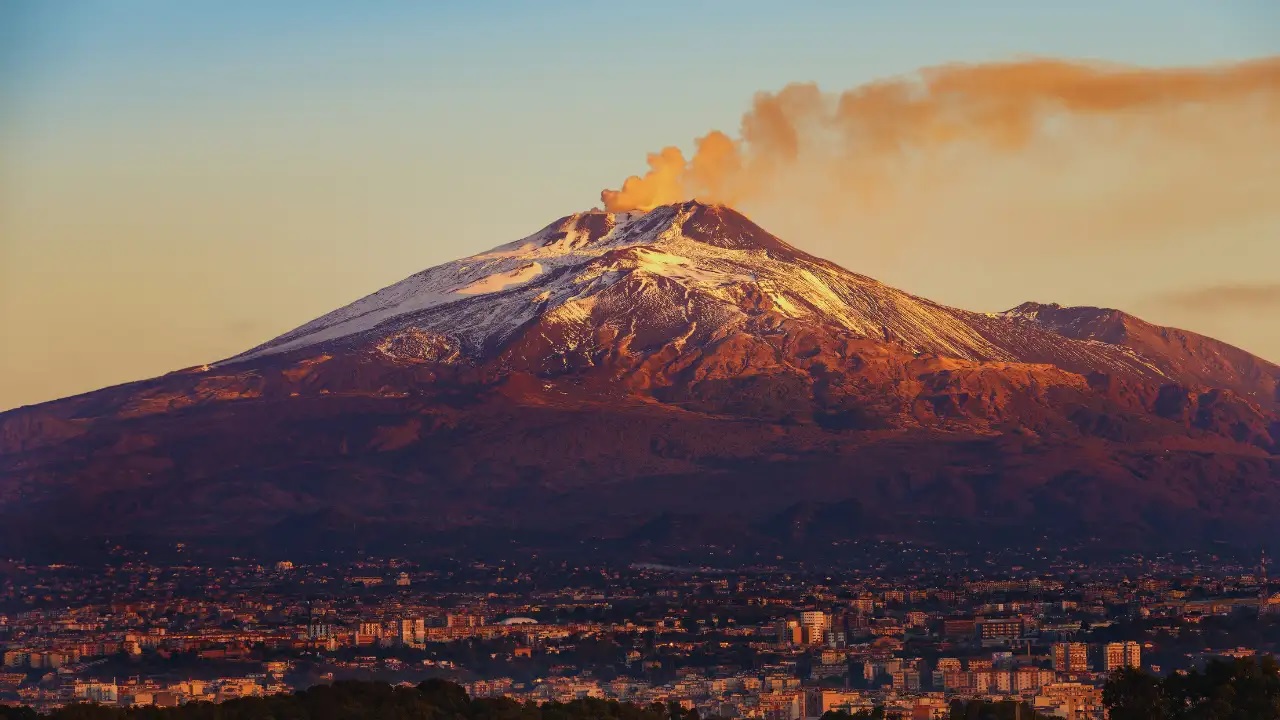
- 18 Feb 2025
In News:
On February 12, 2025, Mount Etna, Europe's tallest and most active volcano, erupted once again, spewing lava flows and dense ash clouds into the atmosphere. The event drew attention not just due to its visual spectacle, but also because of the geological, environmental, and socio-economic implications it carries.
About Mount Etna
- Location: Eastern coast of Sicily, Italy — the largest island in the Mediterranean Sea.
- Type:Active stratovolcano, known for frequent eruptions.
- Height & Size: Highest peak south of the Alps and tallest active volcano in Europe; rises over 3,300 meters and covers 1,190 sq. km with a basal circumference of 140 km.
- Tectonic Setting: Lies above the convergent boundary of the African and Eurasian tectonic plates, making it a hotspot for seismic and volcanic activity.
- Eruption History: Recorded to have erupted over 200 times since 1500 BCE, with persistent volcanic activity.
- UNESCO Recognition: Declared a UNESCO World Heritage Site in 2013 for its exceptional geological features, cultural relevance, and continuous scientific monitoring.
- Decade Volcano Status: Designated a Decade Volcano by the United Nations due to its proximity to densely populated areas, including the city of Catania, and the potential risk it poses, warranting special scientific attention.
Dokra Artwork
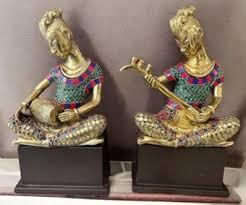
- 18 Feb 2025
In News:
During a recent diplomatic visit, Prime Minister Narendra Modi gifted French President Emmanuel Macron and the First Lady symbolic Indian artifacts — a Dokra artwork and a silver hand-engraved mirror — showcasing India’s rich heritage of tribal and fine metal craftsmanship.
Key Highlights:
Dokra Art: A Living Tradition
- Dokra, also known as Dhokra, is a non-ferrous metal casting craft that employs the lost-wax technique, practiced for over 4,000 years.
- It is predominantly practiced by Ojha metalsmiths and DhokraDamar tribes, across Chhattisgarh, Jharkhand, Odisha, West Bengal, and Telangana.
- Notable for its seamless brass sculptures, each Dokra artifact is cast using a single-use clay and wax mould, ensuring that no two pieces are identical.
- Dokra items include figurines, utensils, jewelry, and religious motifs, often reflecting tribal life and nature.
Historical Significance:
- The “Dancing Girl” of Mohenjo-Daro (from the Harappan Civilization) is considered one of the earliest examples of Dokra-style metal casting, underlining its archaeological and civilizational importance.
Craftsmanship Features:
- The casting process takes nearly a month per piece, reflecting the labour-intensive and skilled nature of the art.
- Dokra is globally recognized for its sustainability, aesthetic uniqueness, and its ability to merge function with folklore.
Prime Minister Dhan-Dhaanya Krishi Yojana (PMDKY)
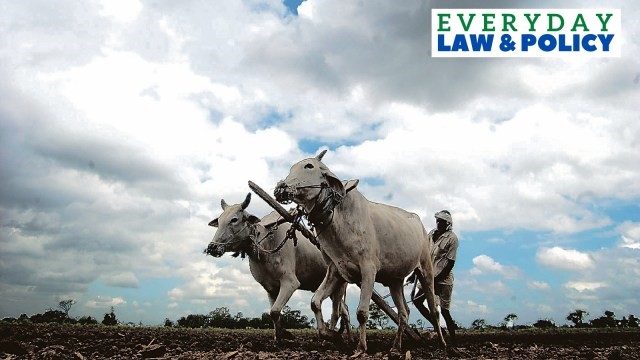
- 18 Feb 2025
In News:
Announced in Union Budget 2025, the Prime Minister Dhan-Dhaanya Krishi Yojana (PMDKY) aims to boost agricultural productivity, sustainability, and rural income in India’s lagging agricultural regions.
Inspired by the Aspirational Districts Programme (ADP), PMDKY targets 100 districts marked by low productivity, moderate cropping intensity, and limited credit access, benefiting approximately 1.7 crore farmers.
Key Highlights:
Objectives:
- Enhancing Agricultural Productivity:Promote scientific techniques and modern farming to improve crop yield and land use efficiency.
- Crop Diversification & Sustainable Practices:Encourage climate-resilient and eco-friendly farming methods, reducing dependence on water-intensive crops.
- Post-Harvest Infrastructure Development:Establish storage and agro-processing units at panchayat and block levels to reduce post-harvest losses (currently ~35-40%).
- Improving Irrigation Efficiency:Support micro-irrigation techniques like drip and sprinkler systems to raise water-use efficiency from the current 38%.
- Expanding Agricultural Credit:Facilitate short- and long-term institutional credit, especially through the Kisan Credit Card (KCC) and agri-fintech models.
Implementation Framework:
- Targeted District Identification:Based on cropping intensity, productivity, and credit penetration, using data from the Ministry of Agriculture, NABARD, and Department of Financial Services.
- Integrated Funding Approach:Leverages existing schemes like RKVY, PMKSY, NFSM, and SMAM through convergence for efficient fund utilization.
- Institutional Mechanism:Multi-tier coordination involving the Centre, States, and District-level authorities for implementation and real-time performance tracking.
- Technology Integration:GIS mapping, AI advisories, blockchain for supply chain transparency, and sensor-based monitoring for precision agriculture.
- Farmer Empowerment:Strengthening Krishi Vigyan Kendras (KVKs) and Farmer Producer Organizations (FPOs) to support knowledge dissemination, skill development, and market access.
Strategic Significance of PMDKY:
- Bridging Regional Disparities:Targets structurally weak districts to ensure balanced regional growth in agriculture.
- Food and Water Security:Supports climate-resilient farming amid rising rainfall variability (+15–20% by 2050) and increasing water scarcity (55% of agriculture is rainfed).
- Boosting Rural Incomes:Aimed at transforming smallholder agriculture, as ~80% of Indian farmers are marginal with an average income of ?1.2 lakh annually.
- Reducing Post-Harvest Losses:Addresses infrastructural bottlenecks causing 35–40% losses, especially in perishables like fruits and vegetables.
India–US TRUST Initiative
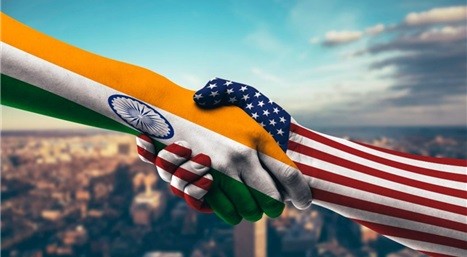
- 18 Feb 2025
In News:
India and the United States launched the Transforming Relationship Utilizing Strategic Technology (TRUST) initiative during the Indian Prime Minister’s 2025 visit to the US. This landmark partnership aims to strengthen bilateral cooperation across critical and emerging technology sectors, diversify global supply chains, and reduce dependence on China in strategic industries.
Key Objectives and Scope of the TRUST Initiative
The TRUST initiative is a comprehensive framework focused on:
- Critical Minerals and Advanced Materials
- Establishing resilient supply chains for critical minerals such as lithium, cobalt, and rare earth elements (REEs)—vital for sectors like defense, semiconductors, clean energy, and electric vehicles (EVs).
- Launch of the Strategic Mineral Recovery Programme to recover and process critical minerals from industrial waste.
- Joint R&D and investment under the Minerals Security Partnership (MSP) and Minerals Security Finance Network (MSFN).
- India to scale up exploration, processing, and recycling of critical minerals under the National Critical Minerals Mission (2025–31) with a ?16,300 crore outlay.
- Pharmaceutical Sector Collaboration
- Reducing India’s reliance on China for Active Pharmaceutical Ingredients (APIs) through alternative supply chains and expanded API manufacturing.
- Encouraging investment in Indian pharma production, including facilities in the US.
- Pharma formed 21.9% of India’s $20 billion consumer goods exports to the US in 2023.
- High-Tech and Emerging Technologies
- Joint R&D in semiconductors, AI, quantum computing, space, defense, biotechnology, and energy.
- U.S.-India AI Roadmap to be finalized by 2025, including data center infrastructure, processor access, and AI applications.
- Facilitating innovation through academic, industrial, and government collaboration.
- Technology Transfer and Trade Facilitation
- Easing export controls and restrictions to foster high-tech trade.
- Enabling smoother cross-border technology flows and investment under mechanisms like the CHIPS Act (ITSI Fund).
Associated Initiatives Enhancing TRUST
- iCET (Initiative on Critical and Emerging Technologies) – Launched in 2022, focuses on bilateral cooperation in semiconductors, AI, quantum, and wireless tech with defense applications.
- INDUS-X – Defense innovation initiative involving India’s iDEX and the US Defense Innovation Unit (DIU), emphasizing secure chip designs and green energy.
- CHIPS Act Collaboration – ITSI Fund supports India's semiconductor capacity through funding for R&D and infrastructure.
Strategic Significance
- Reducing China Dependence:China dominates ~70% of global REE production. TRUST helps India and the US build alternative, secure supply chains.
- Boosting Atmanirbhar Bharat:TRUST supports India’s goals under the National Critical Minerals Mission to become self-reliant in key strategic sectors.
- Enhancing Tech and Defense Capability:Ensures timely access to rare materials essential for missiles, radars, fighter jets, AI hardware, and quantum computing.
- Strengthening Pharma and Health Security:Addresses global API shortages and reduces vulnerability in critical drug manufacturing.
- Promoting Clean Energy Transition:Secures supply of minerals like lithium and cobalt essential for battery production and renewable energy tech.
- Fostering Innovation and Investment:Encourages private sector collaboration and US investments in India’s tech, mineral, and pharma sectors.
Current Status of India’s Critical Minerals Ecosystem
- Imports: India is a net importer of most critical minerals; import bill (FY24) stood at approx. ?30,000 crore.
- Exports: India remains a net exporter in rare earths.
- Budgetary Allocation (2025–31):
- ?7,000 crore for exploration.
- ?1,500 crore for recycling incentives.
MITRA Platform

- 18 Feb 2025
ecosystem, the Securities and Exchange Board of India (SEBI) has launched a new digital platform—MITRA (Mutual Fund Investment Tracing and Retrieval Assistant).
Key Features:
- Objective:MITRA aims to help investors trace, identify, and reclaim inactive or unclaimed mutual fund folios, while ensuring KYC (Know Your Customer) compliance under prevailing regulatory norms.
- Developed by:The platform has been developed at an industry level by the two Qualified Registrar and Transfer Agents (QRTAs) —
- Computer Age Management Services Ltd. (CAMS)
- KFIN Technologies Ltd.
These firms serve as agents of Asset Management Companies (AMCs).
- Hosted by:The platform is hosted jointly by CAMS and KFIN Technologies to serve as a centralized, searchable database for inactive and unclaimed mutual fund folios across the industry.
- Functions:
- Enables investors to search for overlooked investments or investments made in their name by others.
- Facilitates rightful legal claims by heirs or nominees.
- Encourages KYC compliance, thus reducing the number of non-KYC compliant folios.
- Aims to minimize the risks of fraudulent redemptions linked to dormant folios.
- Supports the creation of a transparent financial ecosystem by reducing unclaimed investments.
Definition of Inactive Folio:
- A mutual fund folio is considered inactive when no investor-initiated financial or non-financial transactions have occurred for ten consecutive years, even though the folio holds units.
Institutional Measures:
- Unit Holder Protection Committee (UHPC):SEBI has broadened the role of the UHPC under mutual fund regulations. The committee is now tasked with monitoring inactive folios, unclaimed dividends, and pending redemptions, ensuring proactive steps are taken for investor protection.
- Stakeholder Involvement:SEBI has directed AMCs, RTAs, Registered Investment Advisers (RIAs), the Association of Mutual Funds in India (AMFI), and mutual fund distributors to actively promote awareness regarding MITRA among investors.
FulaniCommunity
- 17 Feb 2025
In News:
The Fulani, one of Africa’s largest and most dispersed ethnic communities, trace their ancestry to the ‘Green Sahara’ period (12,000–5,000 years ago), according to recent genetic and anthropological research. This period, when the Sahara was a fertile, habitable landscape, marks the early development of African pastoralism.
The Fulani population is estimated at 40 million, spread across West and Central Africa, from Senegal and Guinea in the west to Lake Chad in the east. They are particularly concentrated in Nigeria, Mali, Guinea, Senegal, and Niger, and inhabit the Sahel-Savannah belt, straddling arid and semi-arid regions.
Nomadic Lifestyle and Social Structure
Traditionally known for their nomadic pastoralism, the Fulani have maintained a unique socio-cultural identity despite centuries of migration and contact with other African populations. Their society is internally diverse, divided into three main groups:
- Makiyaya: Nomadic herders
- FulaninSoro: Town dwellers
- Bararo: Forest dwellers, with strong ties to ancestral rituals and nature-based belief systems
Fulani communities are largely egalitarian, with a deep emphasis on kinship, family structure, and communal responsibility. Polygamy is widely practiced, and marriage ceremonies are elaborate, often involving intricate rituals and festive celebrations.
Women’s Role and Cultural Expression
Fulani women are recognized for their weaving, artisanal craftsmanship, and particularly their hairstyles, which are often elaborately styled and adorned with beads and cowrie shells—symbols of both identity and aesthetic tradition.
Linguistic and Religious Identity
The Fulani speak Fula (also called Fulfulde or Pulaar), a language belonging to the Atlantic branch of the Niger-Congo language family. Though largely Muslim, many retain spiritual connections with nature-based traditions, particularly among the Bararo groups.
Genetic Heritage and Historical Significance
A recent multinational study led by Uppsala University and Charles University analyzed biological and anthropological data from 460 Fulani individuals across 18 locations in seven African countries. It confirmed a complex genetic history, shaped by:
- Ancient North African ancestry, particularly linked to populations akin to modern-day Berbers of Morocco
- Historical interactions with West, Central, and East African communities
- A shared ancestral genetic component, likely rooted in early pastoral communities of the Green Sahara era
The research underscores that despite their high mobility and limited archaeological footprint, the Fulani have preserved a distinct genetic and cultural identity for millennia.
Fishery Survey of India (FSI)
- 17 Feb 2025
In News:
A landmark deep-sea fishing expedition by the Fishery Survey of India (FSI) has led to the discovery of previously underexploited fishing grounds in the Arabian Sea, offering significant promise for India’s marine resource sustainability, food security, and fishermen’s livelihoods.
Key Highlights of the Expedition
- Conducted by: Fishery Survey of India (FSI), under the Ministry of Fisheries, Animal Husbandry & Dairying
- Supported by: Pradhan Mantri MatsyaSampada Yojana (PMMSY)
- Geographic Scope: Waters between Kollam (Kerala) and Goa, at depths of 300–540 meters
- Location: Approx. 100–120 nautical miles off India’s western coast
- Catch Rate: Average Catch Per Unit Effort (CPUE) recorded at 150–300 kg/hr
- Timing: No significant difference observed in catches between day and night
Marine Biodiversity of the New Grounds
The discovered ecosystem harbors rich and diverse marine life, including:
- Commercially Important Crustaceans:
- Humpback nylon shrimp
- Arabian red shrimp
- Deep sea mud shrimp
- Deepwater spiny lobster
- Deep sea squat lobster
- Cephalopods:
- Opisthoteuthis species
- Octopoteuthissicula
- Diverse Deep-Sea Fishes:
- Froghead eel, Rosy cod, Snake mackerel, Sackfish
- Royal escolar, Bandfishes, Duckbill flathead
- Splendid alfonsino, Myctiophids, Shadow driftfish
- Spinyjawgreeneye, Shortfin neoscopelid, Stargazers
- Elasmobranchs (Cartilaginous Fishes):
- Sicklefin chimaera, Pygmy ribbontail catshark
- Bramble shark, Indian swellshark, Travancore skate
Significance for India’s Fisheries Sector
- Reduces Pressure on Coastal Fisheries: Coastal resources are under stress from overfishing, habitat degradation, and climate change. Deep-sea grounds offer a sustainable alternative.
- Supports Blue Economy Goals: Enhances India’s capacity to sustainably exploit its vast Exclusive Economic Zone (EEZ).
- Economic Benefits: Aligns with the government’s goal of doubling fishermen’s income and generating employment in marine-based livelihoods.
- Scientific Value: Contributes to marine biodiversity documentation and ecosystem-based fisheries management.
14th Asian Fisheries and Aquaculture Forum (14AFAF)
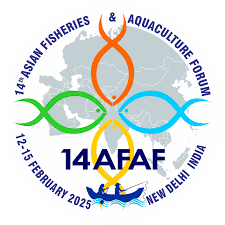
- 17 Feb 2025
In News:
India is set to host the 14th Asian Fisheries and Aquaculture Forum (14AFAF) from February 12–14, 2025, at the ICAR Convention Centre, Pusa Campus, New Delhi.
Key Highlights
- This triennial international event—organized by the Asian Fisheries Society (AFS), Indian Council of Agricultural Research (ICAR), Department of Fisheries (DoF), and AFS Indian Branch (AFSIB)—is themed "Greening the Blue Growth in Asia-Pacific".
- It aims to promote sustainable, inclusive, and innovation-driven development in the fisheries and aquaculture sector.
- Previous Indian Host: India is hosting the AFAF for the second time, the first being the 8th AFAF in Kochi (2007).
- Legacy: AFAF, headquartered in Kuala Lumpur, Malaysia, has been a leading platform for fostering global cooperation in fisheries and aquaculture since its inception.
India's Role and Significance
- India ranks second globally in total fish production and aquaculture output, underlining its emerging leadership in the blue economy.
- The forum presents a strategic opportunity to:
- Showcase India’s technological and policy advancements.
- Strengthen international collaborations.
- Promote sustainable, resilient, and globally competitive aquaculture systems.
Forum Structure and Thematic Sessions
The event will feature 20+ technical sessions and keynote presentations by international experts, focusing on priority areas such as:
- Sustainable Fisheries Management:Emphasis on responsible fishing, biodiversity preservation, and efficient resource utilization.
- Climate Change and Fisheries:Addressing climate impacts on aquatic ecosystems and developing adaptive strategies.
- Smart Aquaculture & Technology:Integration of AI, IoT, and blockchain to enhance fish farming efficiency and monitoring.
- Fish Genetics & Biotechnology:Innovations for disease resistance, improved yields, and genetic advancements.
- Post-Harvest and Value Addition:Improving fish quality, market access, and export competitiveness through better processing techniques.
Crocodile Catfish
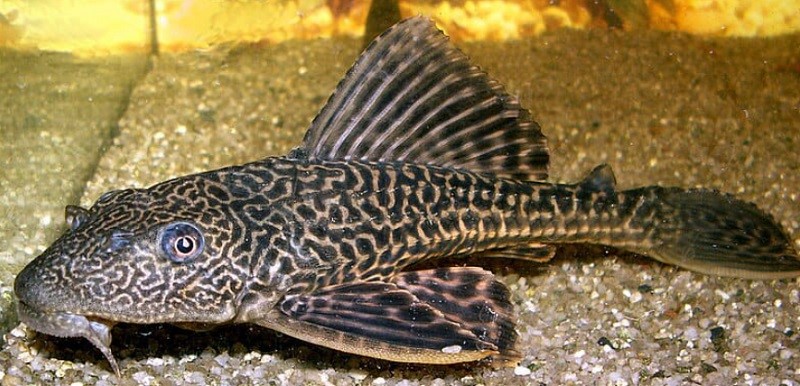
- 17 Feb 2025
In News:
The recent discovery of the Crocodile Catfish (Bagariussuchus) in the Bahini River near Basistha, Guwahati, Assam, has garnered attention from conservationists and ecologists alike. As one of the largest freshwater catfish species in Asia, its presence in Indian waters raises both scientific interest and ecological concerns.
Taxonomy and Distribution
- Scientific Name: Bagariussuchus
- Family: Sisoridae – the largest family of Asian catfishes, widely distributed across South and Southeast Asia.
- Common Names: Asian Giant River Catfish, Crocodile Goonch Catfish, Giant Devil Catfish
- Geographical Range: Native to countries including India, Nepal, Bangladesh, Myanmar, and Thailand.
Habitat and Morphological Features
- Natural Habitat: Prefers fast-flowing rivers, deep pools, turbulent rapids, and areas with rocky or gravelly substrates.
- Often found among boulders, submerged roots, and debris, thriving in cool, oxygen-rich waters.
- Physical Description:
- Long, cylindrical body with a broad head and wide mouth.
- Typicallydark brown to black, with irregular patches or spots for camouflage.
- Dorsal fin is elongated, stretching along most of the back.
- Size: Can grow up to 1.5 meters in length and weigh over 50 kilograms, though smaller specimens (~70 cm) are also observed.
Behaviour and Ecology
- Feeding Habits: A carnivorous predator, feeding on smaller fish, crustaceans, and aquatic invertebrates.
- Known for its voracious appetite, capable of consuming prey nearly its own size.
- Most active during evening or nighttime, making it a nocturnal feeder.
- Sexual Dimorphism: Males are generally slimmer and may exhibit slightly brighter coloration than females.
Ecological Concerns
- The discovery of the Crocodile Catfish in a non-native region like the Bahini River raises concerns about its invasive potential.
- It can threaten native aquatic biodiversity by preying on indigenous species and disturbing the ecological balance.
- Overfeeding and rapid proliferation can degrade water quality and disrupt food chains.
Conservation Status
- IUCN Red List: Near Threatened (NT): This status reflects concerns about habitat degradation, overfishing, and ecological displacement, which may impact population stability across its range.
India Gas Market Report: Outlook to 2030

- 17 Feb 2025
In News:
The International Energy Agency (IEA), in its report “India Gas Market Report: Outlook to 2030”, has highlighted the transformative potential of natural gas in India’s energy transition.
As India aims to raise the share of natural gas in its primary energy mix from ~6% to 15% by 2030, the report outlines a roadmap for achieving this goal through policy reforms, infrastructure expansion, and market liberalization.
Current Status and Future Outlook
- Demand Growth: India's natural gas consumption is projected to increase by 60%, reaching 103 billion cubic meters (bcm) by 2030. The City Gas Distribution (CGD) sector, which supplies gas to households, transport, and industries, will drive this growth.
- Domestic Production: India produced 35 bcm in 2023, with the Krishna-Godavari deepwater fields contributing a quarter. Production is expected to reach just under 38 bcm by 2030, a modest 8% increase.
- Import Dependency: With domestic supply growth lagging behind demand, LNG imports are expected to more than double, from ~30 bcm in 2023 to around 65 bcm by 2030. India is already the fourth-largest LNG importer globally.
Infrastructure Expansion
India’s natural gas infrastructure has undergone rapid growth:
- Since 2019, the number of CNG stations quadrupled and residential gas connections more than doubled.
- The gas transmission pipeline network expanded by 40%, with another 50% expansion expected by 2030.
- CGD infrastructure is poised for a further boom, supporting increased consumption in urban areas.
Sectoral Trends
- Industry: Heavy industry and manufacturing are expected to add 15 bcm to gas demand by 2030.
- Refining: Gas use in refineries will rise by over 4 bcm as more refineries get connected.
- Transport: Greater CNG adoption, if incentivized, could significantly reduce vehicular emissions.
Challenges Hindering Growth
- Price Distortion: Prices from legacy fields are capped (e.g., USD 6.5–10 per MMBtu), limiting true market-based discovery.
- Monopoly in Transport & Marketing: GAIL’s dominance in both gas marketing and pipeline ownership creates potential conflicts of interest.
- Storage Limitations: India lacks underground gas storage (UGS) and has limited LNG storage capacity, affecting supply security.
- Policy and Regulatory Gaps: Inadequate third-party access and fragmented pricing/taxation systems reduce investor confidence.
Policy Recommendations by IEA
- Gas Pricing Freedom:
- Implement full pricing freedom, in line with Kirit Parekh Committee (2022) recommendations.
- Initially lift ceilings on high-cost deepwater and ultra-deepwater projects.
- Allow producers to sell more output on platforms like the Indian Gas Exchange (IGX).
- Unbundling Supply and Transmission:
- Establish independent gas transmission system operators (TSOs).
- Legally separate marketing from pipeline operations to ensure fair, non-discriminatory access.
- Standardize Gas Sales Agreements (GSAs) and Gas Transmission Agreements (GTAs).
- Infrastructure and Market Development:
- Ensure transparent, regulated third-party access to pipelines.
- Develop strategic gas reserves and expand LNG terminal capacity.
- Improve data transparency on pipeline capacities and tariffs.
- Tax and Regulatory Reforms:
- Harmonize taxes across fuels to create a level playing field.
- Rationalize GST on CNG vehicles and revise import duties on natural gas.
- Offer tax benefits to natural gas similar to electric vehicles to promote adoption.
- Secure Long-Term LNG Contracts:
- With legacy contracts expiring post-2028, proactive procurement is essential to avoid spot market volatility.
Rising Heatwaves in India
- 16 Feb 2025
In News:
India is increasingly facing more frequent, intense, and prolonged heatwaves, posing a significant threat to public health, economic productivity, agricultural stability, andenvironmental sustainability. This trend underscores the broader implications of climate change, particularly for developing economies with large vulnerable populations.
Understanding Heatwaves
A heatwave is defined as a prolonged period of abnormally high temperatures, often accompanied by high humidity. As per the India Meteorological Department (IMD):
- A heatwave is declared when the maximum temperature reaches at least 40°C in plains and 30°C in hilly regions.
- The severity is determined by how much the temperature exceeds the normal.
Impacts of Heatwaves
- Public Health:
- Prolonged heat exposure increases the risk of heatstroke, dehydration, and worsens cardiovascular and respiratory illnesses.
- Vulnerable groups include the elderly, outdoor workers, and those without access to cooling.
- Livelihoods and Employment:
- According to the World Bank, India could lose 34 million jobs by 2030 due to heat-stress-related productivity declines.
- The informal sector and outdoor labourers are especially at risk.
- Agriculture and Food Security:
- Heat stress leads to reduced crop yields, livestock deaths, and increased irrigation demand.
- It threatens the food supply chain and rural incomes.
- Water Scarcity:
- 54% of India’s land is under high to extremely high water stress, as per the World Resources Institute (WRI).
- Heatwaves exacerbate droughts and deplete groundwater sources.
- Environmental Degradation:
- Higher temperatures increase the risk of wildfires, especially in forested and arid zones.
- Ecosystem services and biodiversity are under stress.
- Infrastructure and Energy:
- Rising temperatures lead to increased energy demand for cooling, straining power grids.
- Urban infrastructure suffers due to heat-induced wear and tear.
President’s Rule Imposed in Manipur
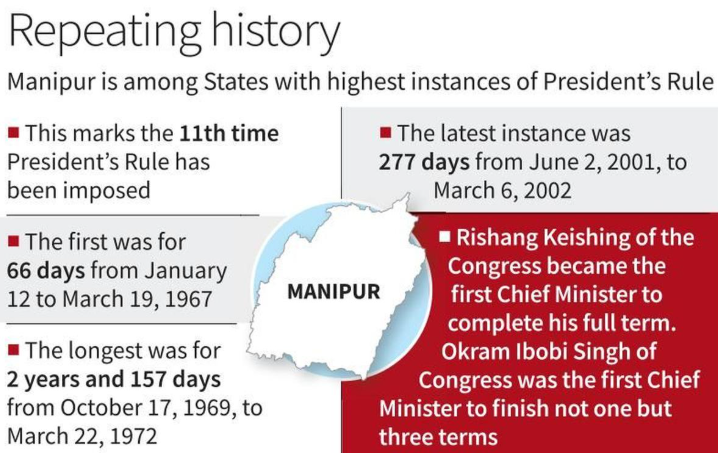
- 16 Feb 2025
In News:
On 13th February 2025, President DroupadiMurmu imposed President’s Rule in Manipur under Article 356 of the Constitution, following a report submitted by the State Governor Ajay Kumar Bhalla. The move comes in the wake of a prolonged period of ethnic violence, governance vacuum, and the resignation of Chief Minister N. Biren Singh on 9th February 2025.
Constitutional Provisions:
- Article 356 empowers the President to assume control of a state’s administration if it is determined that the state cannot be governed as per constitutional provisions.
- The Governor’s report or other evidence of breakdown is a prerequisite.
- Under this, the elected state government is dismissed, and the Governor becomes the executive head on behalf of the President.
- The State Legislative Assembly is either dissolved or placed under suspended animation. In Manipur’s case, it is under suspended animation, with its term valid until 2027.
- The proclamation must be approved by both Houses of Parliament within two months, and if extended, it can last up to six months at a time, with a maximum duration of three years.
Crisis Background and Ethnic Conflict
Manipur has witnessed an intense ethnic conflict between the Meitei and Kuki-Zo communities since May 3, 2023. The violence has led to:
- Over 250 people killed, and
- More than 60,000 displaced.
Security concerns and political instability escalated after the Chief Minister’s resignation, with the BJP leadership unable to find a consensus candidate for replacement. The deteriorating law-and-order situation, coupled with governance paralysis, prompted the imposition of President’s Rule.
Security and Migration Concerns
Former CM N. Biren Singh raised alarm over:
- Rising illegal immigration through the 398-km porous border with Myanmar, worsened by the Free Movement Regime (FMR).
- A demographic shift threatening the State’s land, identity, and resources.
- Post-violence governance failure, as state machinery struggled to respond effectively.
He emphasized the need to intensify detection and deportation of illegal immigrants, a concern linked to the root causes of ethnic tension.
Historical Context
- This is not the first time Manipur has come under central rule. The last imposition of President’s Rule in Manipur lasted 277 days, from June 2, 2001 to March 6, 2002.
Devolution Index Report 2024
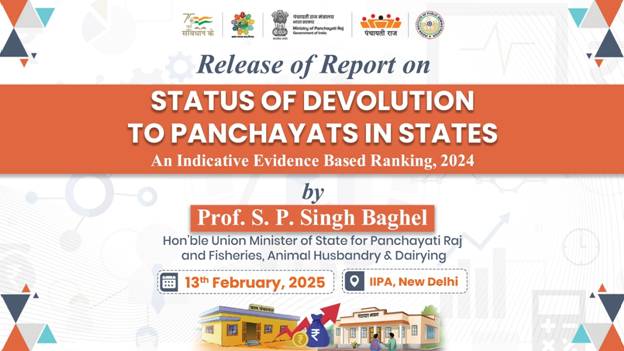
- 16 Feb 2025
In News:
Recently, the Union Minister of State Prof. S. P. Singh Baghel released the Devolution Index Report at the Indian Institute of Public Administration (IIPA), New Delhi.
Titled “Status of Devolution to Panchayats in States – An Indicative Evidence-Based Ranking 2024”, the report assesses the extent of autonomy and empowerment of Panchayati Raj Institutions (PRIs) across Indian States and UTs.
Context and Constitutional Framework
The initiative is anchored in the vision of Article 243G of the Constitution and the 73rd Constitutional Amendment, which mandates the devolution of powers, authority, and responsibilities to Panchayats over 29 subjects listed in the Eleventh Schedule. It reflects the spirit of grassroots democracy and aims to realize the vision of "Local Self-Government".
Core Objectives and Dimensions of the Index
The Devolution Index provides an evidence-based evaluation of decentralization and self-governance in rural India. It assesses PRIs across six critical dimensions:
- Framework – Legal and institutional setup for decentralization.
- Functions – Scope of responsibilities devolved to Panchayats.
- Finances – Fiscal powers and resource autonomy.
- Functionaries – Availability and control over human resources.
- Capacity Building – Training and skill development mechanisms.
- Accountability – Transparency, audit mechanisms, and citizen participation.
Significance and Policy Implications
- Strengthening Cooperative Federalism: By highlighting inter-state comparisons, the Index fosters competitive federalism in the spirit of collaborative governance.
- Multi-Stakeholder Utility:
- Citizens: Increases transparency in Panchayat functioning and fund utilization.
- Elected Representatives: Offers a data-driven basis for decentralization advocacy.
- Officials & Policymakers: Acts as a policy instrument for reform and targeted capacity building.
- Aligns with National Vision:
- Supports Viksit Bharat goals through ??????????????????????????????? (developed and empowered PRIs).
- Contributes to inclusive rural development and grassroots democratization.
Income-tax Bill, 2025
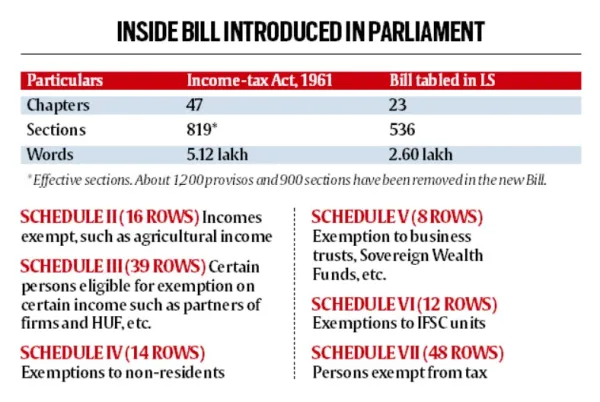
- 16 Feb 2025
In News:
The Income-tax Bill, 2025, tabled in Parliament on February 13, 2025, seeks to repeal and replace the Income-tax Act, 1961, marking a landmark step in tax law simplification.
It reflects the government's commitment to ease of doing business, legal clarity, and tax compliance, without altering the core tax policy or rate structure.
Guiding Principles
- Textual and structural simplification for better clarity.
- Policy continuity—no major tax policy changes.
- Preservation of existing tax rates for predictability.
Approach and Methodology
- Three-pronged strategy:
- Simplify language and eliminate legalese.
- Remove obsolete, redundant, and repetitive provisions.
- Reorganize the Act for logical and easier navigation.
- Consultative process:
- 20,976 online suggestions received.
- Stakeholder consultations with taxpayers, professionals, and industry bodies.
- International best practices reviewed, notably from Australia and the UK.
Quantitative Simplification
Parameter Income-tax Act, 1961 Income-tax Bill, 2025 Change
Words 5,12,535 2,59,676 ↓ 2,52,859
Chapters 47 23 ↓ 24
Sections 819 536 ↓ 283
Tables 18 57 ↑ 39
Formulae 6 46 ↑ 40
Key Features and Improvements
- Qualitative Enhancements:
- Use of simplified and accessible language.
- Consolidation of amendments to reduce fragmentation.
- Enhanced readability via structured use of tables and formulae.
- Elimination of outdated provisions.
- Introduction of "Tax Year":Defined as the 12-month period beginning April 1, providing better uniformity.
- Crypto as Capital Asset:Virtual Digital Assets (VDAs) such as cryptocurrencies included in the definition of "property", now taxable as capital assets.
- Dispute Resolution Clarity:Improved transparency in Dispute Resolution Panel (DRP) procedures by including points of determination and reasoning—addressing a key criticism of ambiguity in the earlier framework.
- Removal of Obsolete Exemptions:Section 54E, providing capital gain exemptions for transfers before April 1992, has been scrapped.
- Expected Timeline:Once enacted, the Income-tax Act, 2025 is proposed to come into effect from April 1, 2026.
Gangasagar Mela
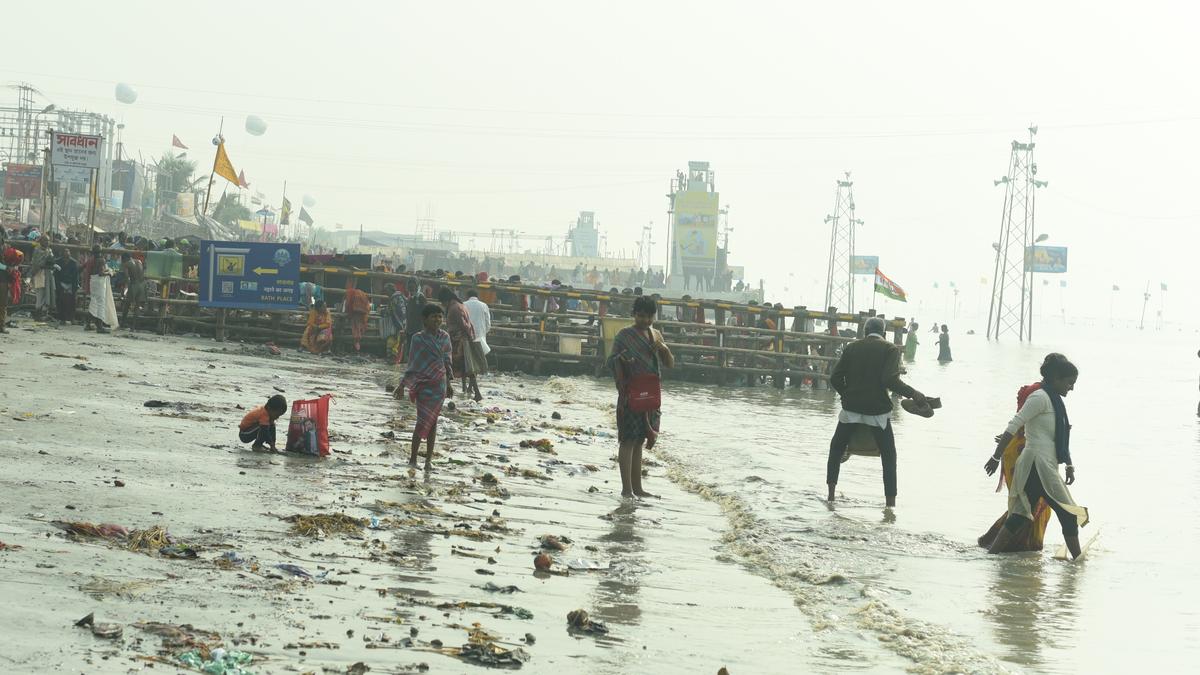
- 16 Feb 2025
In News:
Recently, several Ministers of the West Bengal government gathered at a conference room on Sagar Island, situated at the mouth of the Bay of Bengal — the southernmost tip of the State — to brief mediapersons on the arrangements for the Gangasagar Mela 2025.
Gangasagar Mela: Overview
- Second-largest human congregation in the world, after the Kumbh Mela.
- Held annually on Makar Sankranti (January 14) at the confluence of River Ganga and Bay of Bengal.
- Pilgrims take a holy dip at the confluence; site houses the Kapil Muni Temple.
- In 2025, the West Bengal government claimed over 1.10 crore pilgrims visited.
Location & Geography
- Sagar Island (Sagardwip/Ganga Sagar):
- Located ~120 km from Kolkata.
- Largest island in the Sundarbans archipelago.
- Population: ~2 lakh (2011 Census).
- Classified under the sand group category.
- Accessed by crossing the Muriganga River via ferry.
Climate Change Impact
- Rising sea levels and erosion are threatening Sagar Island:
- Sea has advanced from 1,500 m to 470 m from the Kapil Muni Temple in ~10 years.
- Tidal surge rises from 4.6 m to 7.6 m during high tides.
- Erosion worsened by:
- Mangrove destruction for construction during mela.
- Flattening of sand dunes and vegetation, removing natural barriers.
Environmental Challenges
- Constructions often violate Coastal Regulation Zone (CRZ) norms (no construction within 500 m of high tide line).
- Beaches have turned muddy, unfit for bathing; pilgrims walk through marshes.
- Concrete embankments, built after removing mangroves, washed away during cyclones.
- Geotextiles used for erosion control are ineffective near the temple due to strong wave action.
Cyclones & Vulnerability
- Recent major cyclones: Yaas (2021), Remal (May 2024), Dana (Oct 2024).
- Local communities frequently displaced; loss of livestock and property reported.
- Rising salinity impacting fish farming and livelihoods.
Socio-Economic Impact
- Youth migration due to lack of job opportunities.
- Local economy disrupted by environmental stress.
- Many locals say the mela offers little direct benefit to them.
Governance and Policy Issues
- West Bengal government spent ~?250 crore in 2024 for mela arrangements.
- Proposed ?4,100 crore World Bank-funded embankment project:
- World Bank: 70% cost; State: 30%.
- Aimed at protecting 52 inhabited islands in Sundarbans.
- Centre-State conflict:
- WB government alleges non-cooperation from the Centre.
- No Central funds provided for the mela, unlike the Kumbh Mela.
- Demand for national mela status for Gangasagar.
Cultural and Political Dimensions
- Religious significance emphasized by Shankaracharya of Puri.
- Soft Hindutva strategy attributed to West Bengal’s ruling party (TMC).
- Political undertones visible in temple construction and event promotion.
UDAN 5.5 – Advancing Last-Mile Air Connectivity
- 15 Feb 2025
In News:
- The Government of India has launched UDAN 5.5, the latest phase of its flagship regional air connectivity scheme UDAN (UdeDesh ka AamNaagrik).
- It aims to enhance last-mile air connectivity in remote, hilly, and island regions using smaller aircraft, helicopters, and seaplanes.
About UDAN Scheme
- Launched: 2016, under the National Civil Aviation Policy (NCAP).
- Nodal Ministry: Ministry of Civil Aviation.
- Purpose: To make air travel affordable, accessible, and widespread, especially in Tier-2 and Tier-3 towns.
Objectives
- Provide affordable air travel to the common citizen.
- Improve air connectivity in unserved and underserved regions.
- Promote regional development and economic integration.
Key Features
- Fare Cap: ?2,500 per hour of flight for 50% of seats (about 500 km distance).
- Viability Gap Funding (VGF):
- Provided to airlines to cover shortfalls between operational cost and revenue.
- Financed via Regional Connectivity Fund (RCF).
- Government Contribution to VGF:
- State Governments: 20%
- Union Territories & North-Eastern Region (NER) States: 10%
- Support Measures: Concessions from Central/State Governments and airport operators.
Special Variants Under UDAN
- Lifeline UDAN: For transporting medical cargo during COVID-19.
- Krishi UDAN: For agricultural produce value realization, especially from NER and tribal districts.
- International UDAN: To connect NER cities like Guwahati and Imphal with international destinations.
UDAN 5.5 – Key Highlights
- Focuses on last-mile connectivity in challenging terrains where traditional aviation is impractical.
- Aircraft Types Allowed:
- Category 1A: < 9 seats
- Category 1: < 20 seats
- Operational Modes:
- Seaplanes: Use of 80 water bodies including waterdromes, ponds, dams.
- Helicopters: Routes mapped from 400 helipads nationwide.
- Small Aircraft: Routes specifically for aircraft under 20-passenger capacity.
- Encourages air taxi and niche aviation operators.
Achievements of UDAN (as of 2024)
- Passenger Impact: Enabled travel for over 1.5 crore passengers.
- Flight Operations: Over 2.8 lakh UDAN flights completed.
- Route Expansion: 619 routes operationalized, including helicopter routes.
- Airport Growth: Number of operational airports doubled from 74 in 2014 to over 157 in 2024.
- Destinations Connected:
- 68 unserved/underserved destinations added: includes 58 airports, 8 heliports, 2 water aerodromes.
Future Scope
- Current Challenges:
- India currently has no active seaplane services.
- Fewer than 20 small aircraft (Category A1) in operation.
- Projected Developments (next 5 years):
- Establishment of 50+ seaplane routes.
- Creation of 20–25 water aerodromes.
- Induction of around 30 new aircraft for regional connectivity.
Einstein Ring Discovered by ESA’s Euclid Telescope
- 15 Feb 2025
In News:
- The European Space Agency’s (ESA) Euclid space telescope has recently discovered a rare Einstein ring around the galaxy NGC 6505, located nearly 590 million light-years from Earth.
- This ring was formed by the light of a distant unnamed galaxy situated 4.42 billion light-years away, distorted and amplified due to gravitational lensing by NGC 6505.
What is an Einstein Ring?
- It is a circular ring of light that appears around a massive celestial object such as a galaxy, dark matter concentration, or cluster of galaxies.
- Caused due to strong gravitational lensing, it occurs when a massive foreground object (gravitational lens) bends and amplifies the light from a background object, resulting in a circular or arc-like appearance.
- The phenomenon only results in a full ring when the observer, lensing object, and background galaxy are almost perfectly aligned.
Theoretical Basis
- Named after Albert Einstein, who in his General Theory of Relativity predicted that massive objects warp space-time, thereby bending the path of light.
- The phenomenon of gravitational lensing, and by extension Einstein rings, was first theoretically anticipated by Einstein and empirically confirmed much later.
Scientific Importance
- Extremely rare phenomena: Occur in less than 1% of galaxies.
- Serve as natural cosmic magnifying lenses that allow scientists to study:
- Dark Matter: Helps trace the invisible distribution of dark matter through gravitational effects.
- Dark Energy: Supports understanding of dark energy’s role in accelerating the universe’s expansion.
- Distant Galaxies: Reveals otherwise invisible galaxies by amplifying their light.
- Universe Expansion: Provides data on how space between galaxies stretches over cosmic time.
Gravitational Lensing: Explained
- Gravitational lensing occurs when a massive body (galaxy, cluster, black hole) creates a gravitational field that bends and magnifies light from objects behind it.
- This leads to multiple outcomes — arcs, double images, or full rings (Einstein rings).
- The lensing object in the recent case is NGC 6505, a galaxy first observed in the 19th century.
Observation and Imaging
- Einstein rings are not visible to the naked eye and require powerful space telescopes like Euclid for detection.
- Euclid captured images showing a bright central galaxy (NGC 6505) with a distinctive, cloudy ring formed by the bent light from the background galaxy.
About the Euclid Space Telescope
- Launched in 2023 by ESA using a SpaceX Falcon 9 rocket from Cape Canaveral, Florida.
- Operates from Lagrangian Point 2 (L2), located 1.5 million km from Earth.
- Designed for a six-year mission to study the dark universe.
- Key Objectives:
- Create the largest 3D map of the cosmos.
- Observe billions of galaxies across 10 billion light-years.
- Understand the distribution of dark matter and the influence of dark energy in the early universe.
- Study light emitted from galaxies up to 10 billion years ago to trace cosmic evolution.
Gender Budgeting
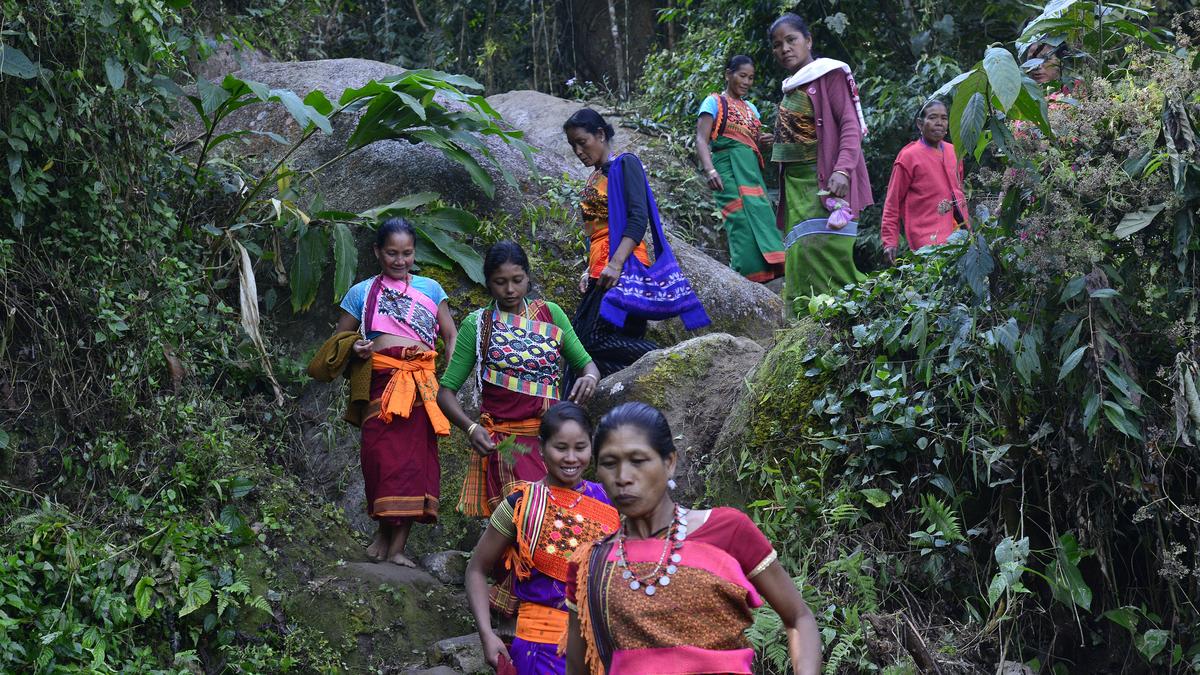
- 15 Feb 2025
In News:
The Gender Budget allocation for FY 2025-26 has increased to ?4.49 lakh crore, accounting for 8.86% of the total Union Budget, up from 6.8% in FY 2024-25. This represents a 37.25% increase compared to the ?3.27 lakh crore allocated in the previous year.
Key Highlights:
- Expansion Across Ministries:
- A total of 49 Ministries/Departments and 5 Union Territories (UTs) have reported allocations in the Gender Budget Statement (GBS) for 2025-26, marking the highest participation since the inception of the Gender Budget.
- Twelve new Ministries have been included in the GBS this year, signaling a broader inclusion of gender considerations in sectors such as animal husbandry, biotechnology, water resources, food processing, and railways.
- Gender Budget Allocation Breakdown:
- Part A (100% Women-specific schemes): ?1,05,535.40 crore (23.5% of total GBS).
- Part B (30-99% allocation for women): ?3,26,672 crore (72.75% of total GBS).
- Part C (Below 30% allocation for women): ?16,821.28 crore (3.75% of total GBS).
- Top Ministries reporting high percentages in gender-focused allocations include the Ministry of Women & Child Development (81.79%), Department of Rural Development (65.76%), and Department of Health & Family Welfare (41.10%).
- Focus on Women’s Economic Participation:
- The Union Budget aims to boost women’s participation in economic activities, targeting 70% by 2047.
- Women’s Labour Force Participation Rate (LFPR) rose to 42% in 2023-24 from 33% in 2021-22.
- Efforts to close the gender gap involve increased allocations to programs like Skill India, Deendayal Antyodaya Yojana-National Rural Livelihoods Mission (DAY-NRLM), and PM Vishwakarma, with 52% of the ?1.24 lakh crore allocated for these programs earmarked for women and girls.
- Support for Women Entrepreneurs:
- Women own 20.5% of micro, small, and medium enterprises (MSMEs) in India, employing approximately 27 million people.
- The Budget focuses on empowering women entrepreneurs by advocating for collateral-free loans, alternative credit scoring models, and financial literacy programs.
- Establishing 30 million additional women-owned businesses could generate 150-170 million jobs by 2030, contributing significantly to India's employment needs.
- Gig Economy and Informal Sector:
- The Budget introduces measures to formalize gig workers, 90% of whom are women. By issuing identity cards and registering gig workers on the e-Shram portal, the Budget aims to provide them with access to social security and financial inclusion benefits.
- This addresses the challenges faced by women in the informal sector, including low wages, job insecurity, and lack of maternity benefits.
- Gender Inclusivity in Technology:
- A dedicated ?600 crore allocation under the India AI Mission aims to promote gender inclusivity in the technology sector. This includes the establishment of a Centre of Excellence on Artificial Intelligence (AI) for education and skill development, ensuring women’s participation in high-growth technological fields.
- Gender Budgeting Components:
- Part A: Gender-specific expenditure, directly benefiting women (e.g., BetiBachaoBetiPadhao).
- Part B: Pro-women general expenditure, benefiting both men and women but focusing on women’s advancement (e.g., MGNREGA).
- Part C: Gender-neutral budgets that may require gender-sensitive planning (e.g., Har GharNal project, which reduces women’s time spent fetching water).
- Policy Vision and Challenges:
- The Union Budget for 2025-26 is part of the government’s vision for a "Viksit Bharat" with zero poverty, universal education, 100% skilled labor, and 70% female participation in the workforce by 2047.
- While the Budget lays a strong foundation, addressing persistent challenges like gender pay gaps, occupational segregation, and cultural barriers will require sustained policy interventions, gender-sensitive workplace reforms, and effective implementation of gender-disaggregated data for monitoring outcomes.
Corruption Perceptions Index (CPI) 2024
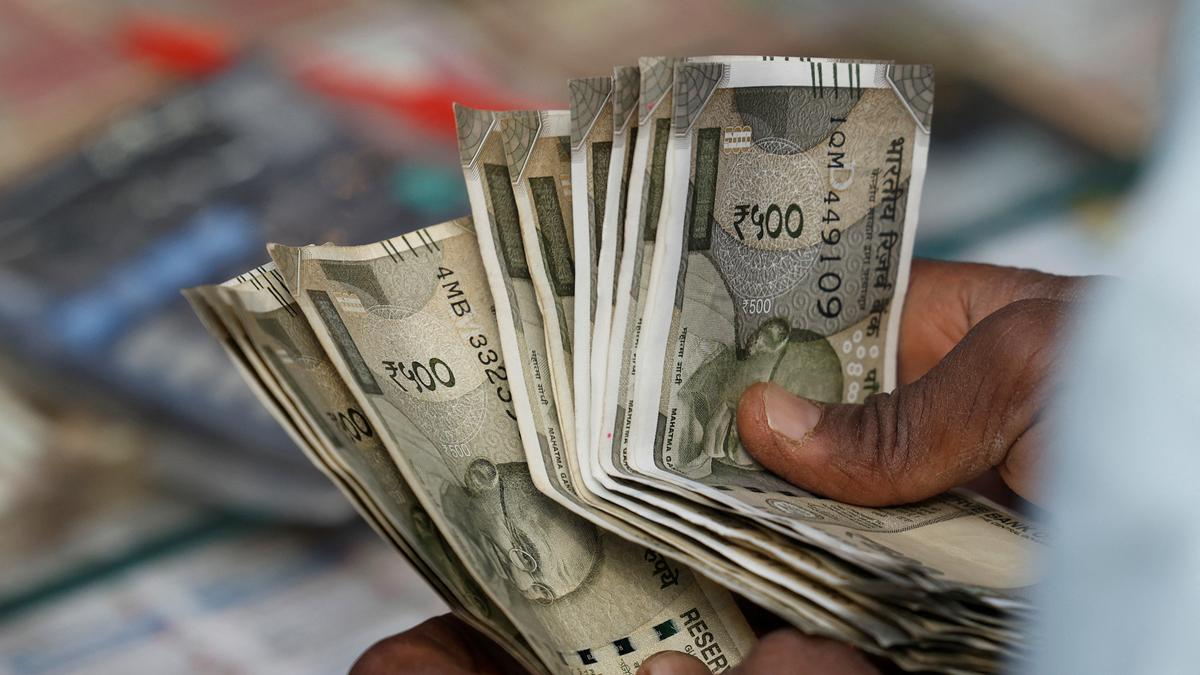
- 15 Feb 2025
In News:
India ranked 96th out of 180 countries in the Corruption Perceptions Index (CPI) for 2024, with a score of 38, a decline from 39 in 2023 and 40 in 2022. This indicates a worsening perception of corruption within India’s public sector.
Global Context:
- The CPI, compiled annually by Transparency International, is a widely recognized global ranking system that evaluates the perceived levels of corruption in public sectors.
- It uses a scale of 0 to 100, where 0 indicates highly corrupt and 100 signifies very clean.
- The CPI is based on expert assessments and surveys, drawing from at least three data sources out of 13 recognized corruption assessments from organizations like the World Bank and the World Economic Forum.
- Top Ranking Countries: Denmark topped the 2024 CPI, followed by Finland and Singapore, indicating strong governance systems with minimal corruption. These countries are recognized for their effective public sector governance, transparency, and low corruption levels.
- Regional Comparison: Among India’s neighbors, Pakistan ranked 135th, Sri Lanka at 121st, Bangladesh at 149th, and China ranked 76th, performing relatively better than India. The Asia-Pacific region, in general, saw a decline in its average CPI score, dropping by one point to 44.
- Global Trends: The CPI 2024 reveals troubling global trends, with corruption being a persistent issue worldwide. While 32 countries have significantly improved their corruption scores since 2012, 148 countries have either stagnated or worsened in the same period.
- The global average score remains at 43, with more than two-thirds of countries scoring below 50, signaling a widespread corruption problem.
- Corruption’s Impact on Climate Action: One of the significant findings in 2024 is the link between corruption and climate action. Corruption undermines efforts to combat climate change by misappropriating funds meant for emission reduction and climate adaptation projects.
- The report warns that such corruption obstructs effective policies and hinders climate change mitigation, leading to environmental degradation. Furthermore, it highlights that corruption in high-CPI countries often serves the interests of fossil fuel companies, complicating global climate efforts.
- Corruption and Human Rights: The report underscores that corruption not only impedes economic development but also contributes to the erosion of democracy, human rights violations, and instability. Corruption, particularly in the form of misallocation of resources, exacerbates the vulnerability of populations already affected by climate change, poverty, and human rights abuses.
- Financial Hubs and Illicit Funds: Many countries with high CPI scores, despite their lower domestic corruption levels, serve as financial hubs that attract illicit funds stemming from corruption and environmental damage. This "dirty money" exacerbates corruption on a global scale and has far-reaching consequences that extend beyond national borders.
- The Call for Action: Transparency International’s report stresses the need for global cooperation in tackling corruption. It warns that corruption is a major contributor to the rise of authoritarianism and calls for urgent, concrete action to address global corruption. The report emphasizes that combating corruption is crucial for achieving a peaceful, sustainable, and democratic world.
India’s Indigenous Shakti Semiconductor Chip

- 15 Feb 2025
In News:
India has achieved a significant milestone in semiconductor technology with the development of the indigenous Shakti semiconductor chip. Developed by the Indian Institute of Technology (IIT) Madras in collaboration with the Indian Space Research Organisation (ISRO) and supported by the Ministry of Electronics and Information Technology (MeitY), the Shakti chip is a crucial component of India’s push for technological self-reliance under the Digital India RISC-V (DIRV) initiative.
Overview of Shakti Semiconductor Chip
- The Shakti chip is an indigenous microprocessor based on the RISC-V open-source Instruction Set Architecture (ISA).
- Its primary objective is to meet the high-performance computing, security, and reliability needs of India’s defense, aerospace, and space industries.
- It was specifically designed to support applications in satellite missions, avionics, embedded systems, and command-and-control operations.
- The chip is the third in the Shakti series, following the earlier RIMO (2018) and MOUSHIK (2020) chips, which served as technology demonstrators.
Key Features:
- Indigenous Development: Fully developed, fabricated, and tested in India, ensuring complete control over the design and manufacturing process.
- RISC-V Architecture: The Shakti chip utilizes the RISC-V open-source architecture, offering flexibility for customization and adaptation to various hardware and application needs.
- Fault Tolerant and Reliable: Designed to endure the harsh conditions of space and defense applications, making it highly reliable for mission-critical functions.
- High-Performance Computing: Supports complex functions like AI-based operations, real-time control systems, and sensor integration, essential for space missions and advanced defense technologies.
- Advanced Security: Aimed at providing robust security measures for critical sectors, including defense and aerospace, ensuring protection against cyber threats.
- Expandable and Scalable: The chip supports multiple boot modes and hybrid memory extensions, allowing for future upgrades and expansions, especially for space exploration.
Applications of the Shakti Chip
- Space Missions: The Shakti chip plays a vital role in powering ISRO's command-and-control systems, satellite avionics, and embedded systems used in various space missions.
- Defense & Aerospace: It enhances India’s strategic autonomy by reducing reliance on foreign semiconductor technology for military-grade electronics.
- IoT & AI Applications: The chip’s high-performance computing capabilities are ideal for smart systems, the Internet of Things (IoT), and AI applications.
- Research and Development: The chip contributes significantly to India’s semiconductor ecosystem, providing a foundation for further R&D in indigenous chip fabrication.
The Digital India RISC-V (DIRV) Initiative
- Launched in April 2022 by MeitY, the DIRV initiative aims to strengthen India’s semiconductor ecosystem by promoting the development of indigenous RISC-V-based microprocessors.
- The initiative emphasizes reducing dependency on foreign semiconductor solutions and fostering self-reliance in the digital sector.
- DIRV also focuses on high-performance computing for emerging technologies such as 5G, AI, and cloud computing. Through collaborations with IITs, ISRO, C-DAC, and private industry partners, the program aims to create a robust ecosystem for scalable microprocessor solutions.
IRIS: A Key Development from Shakti
- One of the most notable outputs of the Shakti chip initiative is the IRIS (Indigenous RISC-V Controller for Space Applications).
- Developed for ISRO’s space missions, the IRIS chip is a high-performance, fault-tolerant, 64-bit processor based on the Shakti microprocessor.
- It has been designed to meet the specific needs of space missions, such as satellite command-and-control systems, by integrating custom modules like watchdog timers and advanced serial buses.
- The IRIS chip also features multiple boot modes and hybrid memory extensions for future scalability and expansion in line with upcoming space missions.
Market Intervention Scheme (MIS)
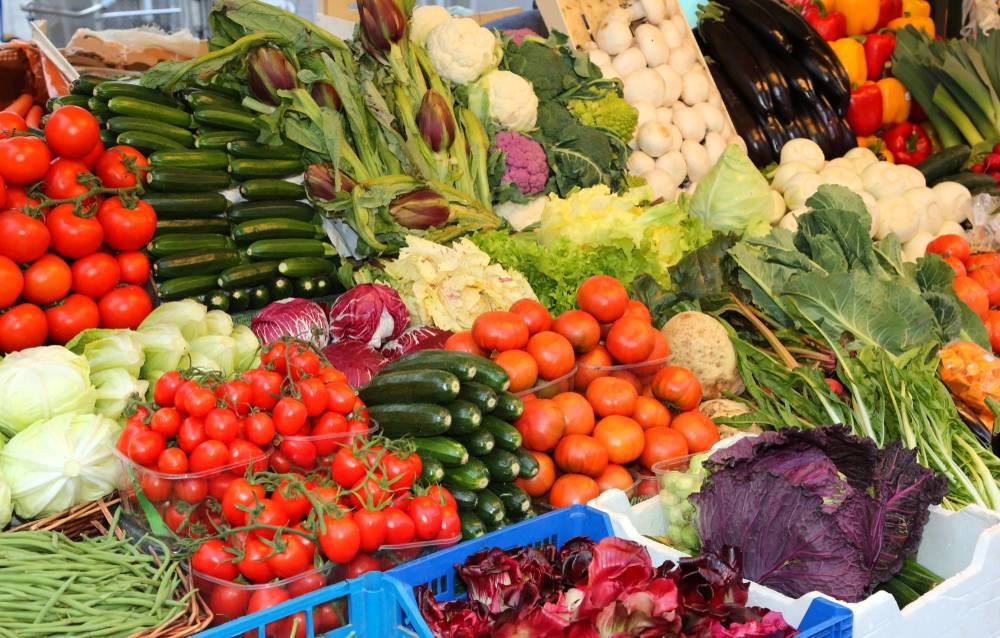
- 14 Feb 2025
In News:
To enhance the efficacy and wider adoption of MIS, the Government of India revised the guidelines in 2025.
Key Highlights:
- Objective: It aims to provide price support for perishable agricultural and horticultural commodities not covered under the Minimum Support Price (MSP) regime. It prevents distress sales during periods of excessive production and sharp price declines.
- Implementing Authority:The scheme is under the Department of Agriculture & Farmers’ Welfare and is now a component of the PM-AASHA (Pradhan Mantri AnnadataAaySanrakshan Abhiyan) umbrella scheme.
- Eligibility & Activation:
- Implemented on the request of State/UT Governments.
- Triggered when market prices fall by at least 10% compared to the average price of the previous normal year.
- Nature of the Scheme:
- Ad-hoc price support mechanism operational during sudden market crashes.
- Cost-sharing pattern between Centre and States is 50:50, and 75:25 for North-Eastern states.
- Procurement Provisions (Revised 2025):
- Procurement limit increased from 20% to 25% of total production of the crop.
- Direct Benefit Transfer (DBT) mode introduced: States may directly compensate farmers for the price difference between Market Intervention Price (MIP) and actual selling price.
- Physical procurement is optional under the revised scheme.
- Authorized Procurement Agencies:
- Central Nodal Agencies like NAFED (National Agricultural Cooperative Marketing Federation of India) and NCCF (National Cooperative Consumers’ Federation of India).
- Farmer Producer Organizations (FPOs), Farmer Producer Companies (FPCs), and state-nominated agencies can also participate in procurement, storage, and transportation.
- Support for Transportation and Storage:
- Reimbursement of storage and transport costs is provided by Central Nodal Agencies for TOP crops (Tomato, Onion, Potato).
- This provision helps balance regional price disparities between producing and consuming states.
- Significance:
- The revamped MIS strengthens market resilience for perishable crop producers.
- Enhances State participation, reduces post-harvest losses, and ensures remunerative returns through institutional and technological support mechanisms.
SevaBhoj Yojana
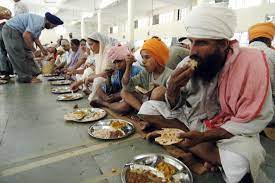
- 14 Feb 2025
In News:
Launched in August 2018 by the Ministry of Culture, the SevaBhoj Yojana is a Central Sector Scheme aimed at supporting charitable and religious institutions that provide free food (langar, prasad, bhandara) to the public without discrimination.
Key Highlights:
- The scheme provides reimbursement of the Central Government’s share of Central Goods and Services Tax (CGST) and Integrated Goods and Services Tax (IGST) paid on the purchase of specific raw food items used in preparing meals.
- Objectives of the Scheme
- Reduce the financial burden on charitable/religious institutions engaged in feeding the public.
- Encourage the tradition of community kitchens and public service across diverse religious institutions.
- Promote inclusive religious philanthropy while ensuring transparency and accountability in public spending.
Key Features
Feature Details
Launched By Ministry of Culture, Government of India
Year of Launch August 2018
Target Beneficiaries Temples, Gurudwaras, Mosques, Churches, Ashrams, Monasteries, etc.
Reimbursed Taxes CGST and Central Share of IGST
Scope of Benefit Raw food items used for free food distribution
Coverage Threshold Institutions must serve free food to at least 5000 people/month
Required Duration of Operation Minimum 3 years of continuous food service
Eligibility Criteria
To qualify for the scheme, institutions must:
- Serve free food to a minimum of 5,000 people per month.
- Be in operation for at least three years prior to application.
- Be registered under:
- Section 10 or 12AA of the Income Tax Act, or
- Societies Registration Act, or
- Relevant public trust laws, or
- Statutory religious bodies constituted under law.
- Possess a District Magistrate’s certificate confirming their ongoing food distribution service.
Implementation Mechanism
The scheme ensures transparency and streamlined reimbursement through a digital and multi-tier process:
- Institutions register on the NGO Darpan Portal of NITI Aayog.
- Apply through the Central Sector Monitoring System (CSMS) Portal of the Ministry of Culture.
- Submit relevant documents to the Nodal Central Tax Officer in their State/UT.
- On verification, a Unique Identity Number (UIN) is issued.
- Verified tax claims are forwarded by the concerned GST Authority to the Ministry.
- The Ministry releases the sanctioned amount to the GST Authority, which reimburses the institution.
Governance and Outreach
- The Ministry promotes the scheme through official websites and social media platforms.
- Efforts are made to ensure equitable representation of all religions and communities.
- As of January 2025, several institutions across states have benefited from the scheme, though individual beneficiary counts are not collected.
S?janam
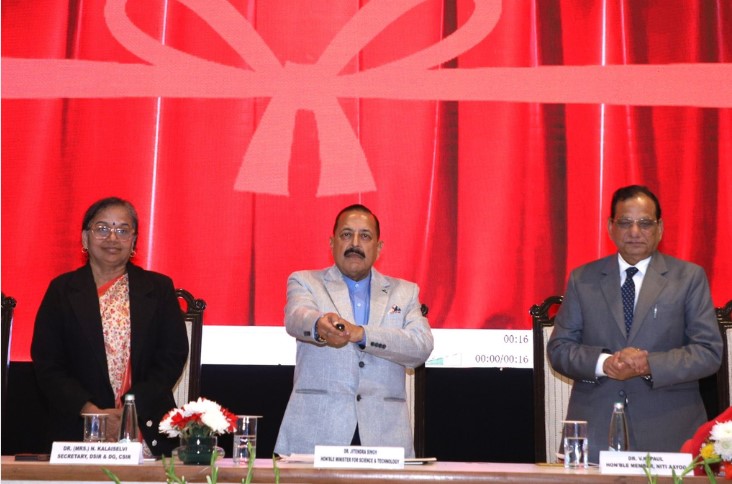
- 14 Feb 2025
In News:
In a significant stride toward sustainable healthcare and waste management, India launched its first indigenous Automated Biomedical Waste Treatment Plant, named S?janam, on April 13, 2025, at AIIMS, New Delhi.
Developed by the CSIR-National Institute for Interdisciplinary Science and Technology (CSIR-NIIST), Thiruvananthapuram, under the Ministry of Science & Technology, this innovative rig marks a paradigm shift in handling biomedical waste, moving away from conventional, polluting incineration techniques.
Why this matter?
India generates approximately 743 tonnes of biomedical waste daily (CPCB, 2023). Safe disposal has been a persistent challenge due to limited infrastructure, high costs, and environmental concerns. The launch of S?janam aligns with the government’s push for “Waste to Wealth” and environmentally responsible healthcare infrastructure, as part of the Atmanirbhar Bharat and Swachh Bharat initiatives.
What is S?janam?
- An automated, eco-friendly biomedical waste treatment rig.
- Designed to disinfect pathogenic waste like blood, urine, sputum, and lab disposables.
- Does not use incinerators, which release toxic emissions such as dioxins and furans.
Key Features & Capacity
Feature Details
Disinfection Process Non-incineration, antimicrobial treatment
Daily Treatment Capacity 400 kg of total biomedical waste
Organic Waste Handling Initially handles 10 kg/day of degradable medical waste
Environmental Safety Neutralizes foul odor; releases pleasant fragrance
Health Safety Minimizes human exposure and risk of contamination
Validation Third-party tested; treated material safer than organic vermicompost
Significance for Public Health and Environment
- Reduces dependency on expensive, energy-intensive incinerators.
- Eco-friendly solution that prevents toxic emissions and groundwater contamination.
- Aligns with Bio-Medical Waste Management Rules, 2016, which mandate safe segregation, treatment, and disposal.
- Enhances India’s capability to respond to health crises (e.g., pandemics), where waste generation spikes.
Strategic Implications
- Promotes indigenous technological innovation under “Make in India.”
- Offers a scalable solution for both urban and rural healthcare setups.
- Contributes to India’s climate commitments by cutting healthcare-related emissions.
NITI Aayog Policy Report on Expanding Quality Higher Education
- 14 Feb 2025
In News:
NITI Aayog released a comprehensive policy report titled ‘Expanding Quality Higher Education through States and State Public Universities (SPUs)’, focusing on the development of higher education institutions, particularly public universities in India.
The report aims to enhance the quality, funding, governance, and employability outcomes within SPUs, which contribute to around 80% of the country's higher education system.
The document, the first of its kind in India, presents a detailed analysis of vital indicators like quality, funding, financing, governance, and employability over the last decade, supported by stakeholder consultations with over 20 states and Union Territories, Vice Chancellors, academicians, and State Higher Education Council Chairs. The report includes nearly 80 policy recommendations, along with 125 performance indicators, aiming to address long-standing challenges within SPUs.
Key Findings from the Report
- Funding:
- Maharashtra leads in funding for higher education, with Bihar and Tamil Nadu following closely behind.
- On the other hand, states like Sikkim, Arunachal Pradesh, and Nagaland have the lowest funding for higher education, highlighting regional disparities.
- University Density:
- The national average university density is 0.8 universities per lakh population. However, states such as Sikkim, with a density of 10.3, and Arunachal Pradesh, Ladakh, Meghalaya, and Uttarakhand have significantly higher densities. In contrast, states like Bihar, Uttar Pradesh, West Bengal, and Maharashtra have lower densities compared to the national average.
- Female Enrolment:
- Kerala, Chhattisgarh, and Himachal Pradesh have achieved higher female enrolment rates than males, which reflects positive gender inclusivity trends in certain regions.
- Challenges:
- Infrastructure deficits, including a lack of quality facilities and resources.
- A shortage of faculty and staff, particularly in advanced fields such as MTech and Ph.D. levels.
- Insufficient investment in research and development (R&D).
- Outdated courses, syllabi, and curricula, which are not aligned with industry needs.
- Financial constraints due to over-reliance on traditional revenue sources like admission fees and state grants.
- Administrative delays in fund sanctioning and the absence of frameworks for securing loans through financial institutions.
Policy Recommendations
The report proposes several reforms to address the aforementioned challenges, with a focus on improving educational quality, securing better funding, enhancing governance, and boosting employability:
- Funding and Investment:
- Increase the combined investment in education to 6% of GDP, as recommended in the National Education Policy (NEP) 2020.
- Increase R&D investment (both public and private) to 2% of GDP, as recommended in the Economic Survey 2017-18.
- Creating Centers of Excellence:
- SPUs should form clusters and focus on addressing local challenges by establishing Centres of Excellence. These centres should focus on region-specific issues to drive academic and practical advancements.
- Governance Reforms:
- Enhance governance structures at SPUs, empowering Vice Chancellors, faculty, and staff through targeted capacity-building initiatives.
- States may consider setting up dedicated finance agencies, similar to the Higher Education Financing Agency (HEFA), to fund infrastructure and research development specifically for SPUs.
- Financial Innovations:
- Develop financial frameworks to increase investment in education, ensuring access to timely funds, and reducing dependency on state grants or admission fees.
- Industry-Academia Collaboration:
- Strengthen the link between academia and industry to ensure that the curricula are relevant and prepare students for the job market. This can be achieved through increased partnerships, internships, and practical learning opportunities.
Pradhan Mantri AnusuchitJaatiAbhyuday Yojana (PM-AJAY)
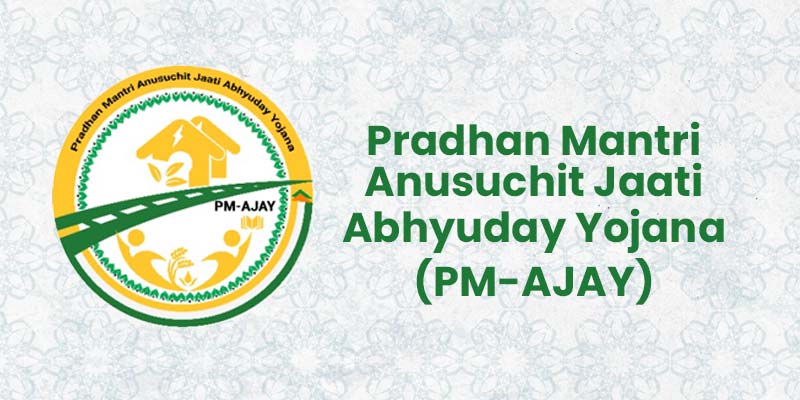
- 14 Feb 2025
In News:
It is a 100% Centrally Sponsored Scheme initiated by the Ministry of Social Justice and Empowerment. The scheme aims at the socio-economic upliftment of the Scheduled Caste (SC) communities, particularly targeting the reduction of poverty through various initiatives that focus on skill development, infrastructure, and income-generating projects.
Key Highlights:
- Launch and Funding: Launched in 2021, the scheme is fully funded by the central government, though states and Union Territories (UTs) have the option to contribute additional funds from their own resources. PM-AJAY is the consolidation of three pre-existing schemes:
- Pradhan Mantri Adarsh Gram Yojana (PMAGY)
- Special Central Assistance to Scheduled Castes Sub Plan (SCA to SCSP)
- BabuJagjivan Ram Chhatrawas Yojana (BJRCY)
- Objectives of PM-AJAY: The scheme is focused on improving the overall well-being of SC communities by:
- Reducing poverty through income-generating schemes, skill development, and infrastructure projects.
- Promoting social and economic development by improving literacy rates, educational enrolment, and providing better livelihood opportunities.
- Transforming SC-majority villages into model villages with integrated development, enhancing socio-economic indicators like education, healthcare, and financial inclusion.
- Eligibility Criteria
- Scheduled Caste (SC) persons living below the poverty line (BPL) are eligible for benefits.
- For infrastructure development, villages with 50% or more SC population are prioritized for grants.
- Key Components of PM-AJAY: The scheme comprises three core components:
- Adarsh Gram Development (formerly PMAGY): Aims to develop SC-majority villages into model villages with holistic improvements in education, healthcare, infrastructure, and skill development.
- Grants-in-Aid for District/State-Level Projects (formerly SCA to SCSP): Financial assistance is provided for livelihood development projects, including skill development programs and infrastructure projects, to generate sustainable income for SC communities.
- Construction of Hostels in Higher Educational Institutions (formerly BJRCY): Focuses on promoting higher education among SC students by constructing hostels in top-ranked institutions according to the National Institutional Ranking Framework (NIRF). This aims to reduce dropout rates and enhance access to quality education.
Special Provisions under the Grants-in-Aid Component
- 15% of the total grants are exclusively allocated for income-generating schemes for SC women.
- 30% of the grants are allocated for infrastructure development in SC-dominated areas.
- 10% of funds are reserved for skill development programs.
- The scheme encourages the formation of SC women cooperatives for producing and marketing consumer goods and services.
Achievements (2022-23)
- 1,260 villages were declared as Adarsh Gram in the financial year 2023-24 under the Adarsh Gram component.
- Nine new hostels were sanctioned under the Hostel Construction component.
- Perspective plans for seven states were approved under the Grants-in-Aid component.
India introduces HS Code for GI-Tagged Rice Exports

- 13 Feb 2025
In News:
India has amended the Customs Tariff Act, 1975, becoming the first country in the world to introduce a Harmonised System (HS) code for Geographical Indication (GI)-tagged rice varieties. This was announced in the Union Budget 2025–26.
Key Features of the Amendment
- HS Code Introduced For:
- 1006-30-11 – GI-tagged parboiled rice
- 1006-30-91 – GI-tagged white rice
- Objective:
- To enable uninterrupted exports of GI rice even during general export restrictions or bans.
- GI rice exports will not require special government notification during such bans.
About Harmonised System (HS) Code
- Full Form: Harmonised System Code
- Developed by: World Customs Organization (WCO)
- Structure: 6-digit global standard; India uses an 8-digit extension for more specific classification.
- Purpose: Classification of traded goods for customs, tariffs, and trade statistics.
- HS Code Hierarchy:
- First 2 digits: Chapter (e.g., “10” for cereals)
- Next 2 digits: Heading (e.g., “06” for rice)
- Last 2 digits: Subheading (e.g., “30” for semi-milled or wholly milled rice)
Impact on GI Rice Exports
- Facilitates global market access for Indian specialty rice varieties.
- Differentiates GI-tagged rice from conventional rice in trade documents.
- Prevents mislabeling and misuse of India’s GI rice identity.
- Allows exports of GI rice even under export bans, without fresh government clearance.
GI-Tagged Rice Varieties in India
- 20 GI-recognized rice varieties, including:Navara, Palakkadan Matta, Pokkali, Wayanad Jeerakasala, etc.
- 20 pending GI applications, including:Seeraga Samba, Jammu & Kashmir Red Rice, Wada Kolam Paddy, etc.
About the World Customs Organization (WCO)
- Established in 1952 as the Customs Co-operation Council; renamed WCO in 1994.
- Headquarters: Brussels, Belgium.
- Membership: 183 customs administrations, including India, covering 98% of global trade.
- Key Functions:
- Maintains and updates the HS Code every 5 years.
- Drives customs modernization through instruments like the Revised Kyoto Convention (RKC).
- Coordinates anti-smuggling, anti-counterfeiting, and trade enforcement efforts.
- Collaborates with global institutions like the WTO and UN to enhance trade efficiency.
Quipu Superstructure
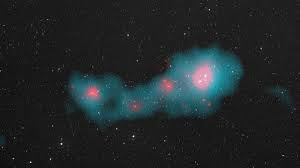
- 13 Feb 2025
In News:
Astronomers have discovered the largest known cosmic structure, named Quipu, in a study led by Hans Bohringer of the Max Planck Institute. The findings are part of efforts to map matter distribution in the universe using redshift data between 0.3 to 0.6, revealing some of the most distant known objects.
Key Features of Quipu:
Attribute Description
Type Superstructure (clusters of galaxy superclusters)
Length ~1.3 billion light-years (Over 13,000 times the Milky Way’s size)
Mass ~200 quadrillion (2 × 10¹?) solar masses
Components ~70 galactic superclusters
Shape Central filament with multiple branching filaments (named after the Incan “Quipu” cord system)
Cosmic Significance:
- Gravitational Lensing (GL): Due to its enormous mass, Quipu bends light from background objects, distorting sky images.
- Cosmic Microwave Background (CMB): Its gravitational field causes fluctuations in the CMB—the relic radiation from the Big Bang.
- Hubble Constant Impact: Quipu and similar structures distort measurements of the Universe’s expansion rate.
Scientific Context:
- Superstructures: Extremely large arrangements of matter including groups of galaxy clusters and superclusters.
- Quipu is hundreds of thousands of times more massive than a single galaxy.
- Discovered at a distance of 425 to 815 million light-years from Earth.
Other Superstructures Identified:
Alongside Quipu, astronomers identified four other massive structures:
- Shapley Supercluster
- Serpens-Corona Borealis Superstructure
- Hercules Supercluster
- Sculptor-Pegasus Superstructure
Together, these five structures:
- Contain ~45% of all galaxy clusters
- Include ~30% of galaxies
- Hold ~25% of the matter in the universe
- Occupy ~13% of the universe’s volume
Future Evolution:
- Scientists consider Quipu a "transient configuration".
- It is expected to break into smaller collapsing units in the future, altering cosmic structures over time.
R-37M Missile
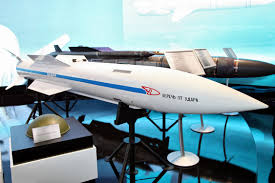
- 13 Feb 2025
In News:
Russia has recently offered the R-37M missile, a state-of-the-art, long-range air-to-air missile, to India. This missile, one of the world’s most advanced, has the potential to transform India's aerial defense capabilities. The offer also comes with the opportunity for India to license the production of this missile domestically. However, the acquisition of such a potent weapon is raising tensions in the region, particularly with Pakistan, China, and Bangladesh, and has broader strategic implications.
Overview of R-37M Missile:
The R-37M, also known by its NATO reporting name AA-13 Axehead, is a hypersonic, long-range air-to-air missile developed by Russia.
It is designed to target high-value assets, such as AWACS (Airborne Warning and Control Systems), tanker aircraft, and other support platforms, beyond visual range (BVR).
Evolved from the R-33 missile, the R-37M significantly enhances air combat capabilities due to its range, speed, and precision.
- Speed and Range: The missile can travel at speeds of up to Mach 6 (approximately 7,400 km/h), enabling it to intercept fast-moving aerial threats. It has an operational range of 300-400 km (160-220 nautical miles), making it one of the longest-reaching air-to-air missiles.
- Weight: The missile weighs 510 kg, with a 60 kg warhead.
- Guidance System: It uses an advanced combination of inertial navigation with mid-course updates, active radar homing, and semi-active radar guidance for the terminal phase.
- Combat Advantage: The R-37M can target beyond visual range, enabling the launching aircraft to engage enemy targets while remaining outside the reach of enemy missiles.
Impact on the Indian Air Force (IAF):
The R-37M missile could replace the current R-77 missile used by India’s Sukhoi Su-30MKI fighter jets. This acquisition will bolster India's air defense by providing enhanced capabilities to intercept aerial threats at greater distances. Additionally, the offer to license the local production of the missile is a significant step toward strengthening India’s defense industry and reducing its dependence on foreign weapon systems. This move can also contribute to India's strategic autonomy in military engagements.
Strategic Implications for Pakistan:
Pakistan’s Air Force (PAF) primarily relies on F-16 fighter jets for its aerial superiority. However, these aircraft are vulnerable to interception beyond the Line of Control (LoC) by the R-37M, which has an engagement range of up to 400 kilometers. This could significantly alter Pakistan's defense posture, as its aircraft would be exposed to threats from Indian aircraft even before crossing the LoC.
Potential Effects on China:
China, which already possesses advanced air-to-air missiles such as the PL-15 and PL-21, will closely monitor India’s acquisition of the R-37M missile. While China is not directly threatened by the missile due to its own advanced defense systems, India’s missile capabilities could alter the balance of air superiority in the region. The acquisition could prompt China to accelerate the development of counter-hypersonic technologies, potentially altering the trajectory of military developments in the region.
Impact on Bangladesh:
Bangladesh, which shares friendly relations with India, could find itself caught in the strategic competition between India and Pakistan, despite its own military capabilities not directly challenging India. The regional military dynamics, influenced by India’s acquisition of advanced weapons like the R-37M, may push Bangladesh to enhance its defense capabilities, either through regional alliances or by procuring advanced defense technologies.
India-Russia Defense Relations:
India’s defense cooperation with Russia has been longstanding and substantial. Between 2015 and 2020, India’s defense imports from Russia were valued at approximately $10 billion, making Russia one of India’s largest defense suppliers. Around 70% of India's defense equipment is of Russian origin. Key joint defense projects include:
- BrahMos Missile: A joint venture to develop a supersonic cruise missile.
- S-400 Triumph: A $5.4 billion deal for five S-400 air defense systems.
- AK-203 Assault Rifles: A project for the local manufacturing of over 700,000 rifles.
- Military Exercises: India and Russia conduct joint military exercises, such as the INDRA (focused on counter-terrorism) and AVIAINDRA (aerial exercises between the Indian Air Force and Russian Aerospace Forces).
Pulmonary Arterial Hypertension (PAH)
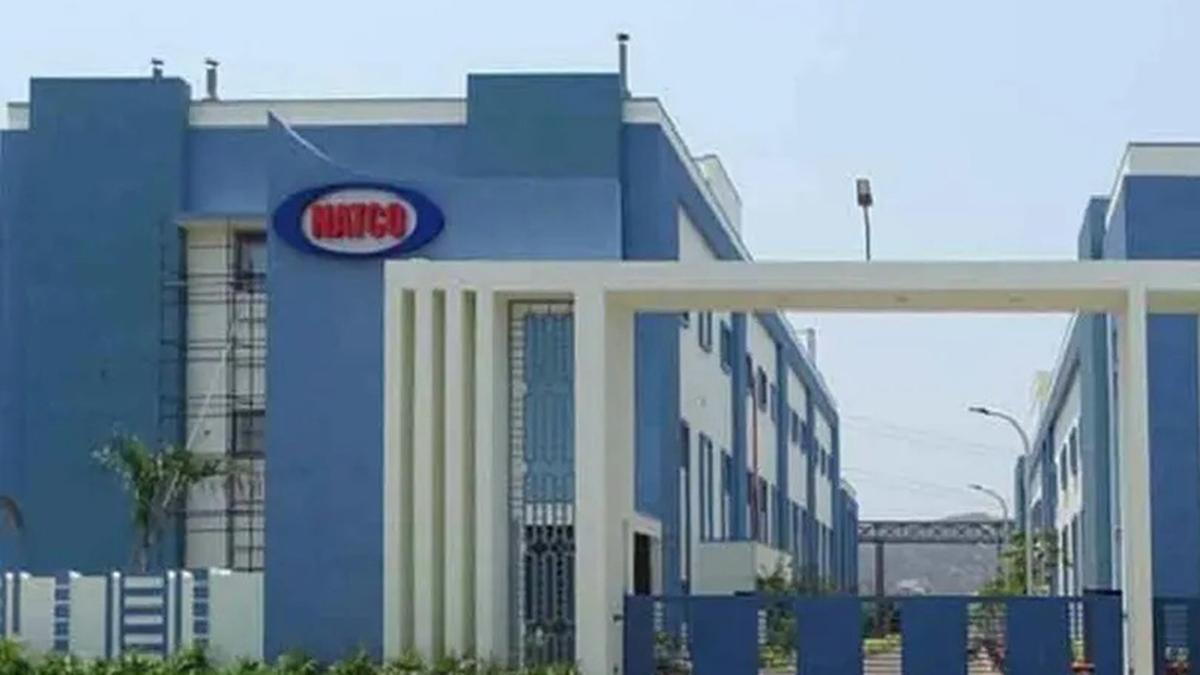
- 13 Feb 2025
In News:
- Natco Pharma, a Hyderabad-based generic drug manufacturer, has received final approval from the U.S. Food and Drug Administration (USFDA) for its generic version of Bosentan tablets for oral suspension (32mg).
- This drug, a generic version of Actelion Pharmaceuticals’ Tracleer, is used to treat Pulmonary Arterial Hypertension (PAH), a condition characterized by high blood pressure in the lungs.
- The approval comes after Natco's successful submission of an abbreviated new drug application (ANDA), which was jointly developed with its marketing partner, Lupin Pharmaceuticals, Inc.
- Natco believes that it holds the sole first-to-file status for the product, which qualifies it for a 180-day exclusivity period upon launch. The exclusivity period would allow Natco to be the only supplier of the generic product in the U.S. market for a limited time, which could offer significant market share before generic competition arrives.
- Bosentan, the active ingredient in Tracleer, is prescribed for patients suffering from PAH, a progressive condition that raises the blood pressure in the lungs and causes strain on the heart.
- The treatment helps to improve pulmonary vascular resistance and is indicated for patients aged three years and above, including those with idiopathic or congenital PAH. The product is expected to improve exercise capacity and overall quality of life for these patients.
- In the U.S., Bosentan 32mg oral suspension generated an estimated $11 million in sales for the 12 months ending September 2024.
Pulmonary Arterial Hypertension (PAH) Overview
- It is a specific type of pulmonary hypertension in which the small arteries in the lungs become thickened and narrowed. This results in obstructed blood flow and increased pressure in the pulmonary arteries, which makes the heart work harder to pump blood through the lungs.
- The exact cause of PAH remains unclear, though it is believed to result from injury to the cells lining the blood vessels in the lungs, leading to long-term vascular disease.
- PAH can develop in association with several medical conditions, including congenital heart disease, liver disease, HIV, and autoimmune diseases like scleroderma and lupus. It can also be triggered by past or current drug use, such as the abuse of methamphetamine or the use of certain diet pills.
Symptoms of PAH include:
- Shortness of breath that worsens over time
- Fatigue and dizziness
- Chest pain
- Cyanosis (blue fingers or lips)
- Fainting episodes
While there are treatment options available for PAH, including medications that help manage the symptoms and slow disease progression, there is currently no known cure. PAH remains a significant area of concern in pulmonary healthcare, and the introduction of generic Bosentan by Natco Pharma offers a more affordable treatment option for patients in the U.S.
Exercise Cyclone 2025
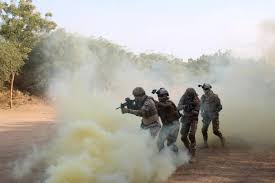
- 13 Feb 2025
In News:
- The third edition of the India-Egypt Joint Special Forces Exercise CYCLONE is being conducted from February 10–23, 2025 at the Mahajan Field Firing Range, Rajasthan.
- The previous edition (2nd) was held in Egypt in January 2024, and the first edition was conducted in India in 2023.
About Exercise CYCLONE
- It is a bilateral joint special forces military exercise between India and Egypt.
- Annual exercise, held alternatively in India and Egypt.
- The 2025 edition is focused on:
- Counter-terrorism operations
- High-intensity combat training
- Survival techniques in desert/semi-desert terrain
- Tactical drills and real-world combat scenarios
- Motto of the exercise: “Together we train, together we excel.”
Objectives
- Enhance military-to-military cooperation.
- Strengthen interoperability and joint operational capabilities.
- Exchange of special warfare tactics and combat strategies.
- Operate under frameworks aligned with Chapter VII of the UN Charter (pertaining to threats to peace, breaches of peace, and acts of aggression).
Strategic Importance
- The exercise reflects deepening India-Egypt defence cooperation.
- Aimed at enhancing readiness for evolving security challenges in the region.
- Enables both forces to operate together in simulated combat situations, improving coordination and adaptability.
India-Egypt Relations: Defence and Beyond
- Strategic Partnership established in 2023, covering:
- Political, defence, security, energy, and economic cooperation.
- Bilateral Trade Agreement (1978): Based on Most Favored Nation (MFN) clause.
- India is one of Egypt’s key trading partners in Africa.
Restructured National Bamboo Mission (NBM)
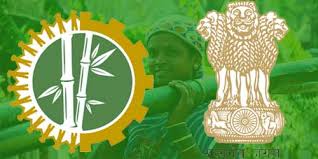
- 12 Feb 2025
In News:
The National Bamboo Mission (NBM) was initially launched in 2006 under the Ministry of Agriculture & Farmers Welfare to promote bamboo-based development. Between 2014–2016, it was subsumed under the Mission for Integrated Development of Horticulture (MIDH).
In 2018-19, it was restructured under the National Mission for Sustainable Agriculture (NMSA) as a Centrally Sponsored Scheme (CSS) to revamp bamboo cultivation, processing, and value chain integration.
A key reform was the 2017 amendment to the Indian Forest Act, 1927, which removed bamboo grown outside forests from the definition of “tree.” This de-regulated its felling and transit, boosting private bamboo farming and easing trade.
Objectives
- Increase the availability of quality planting materials and expand area under bamboo cultivation, especially in non-forest land.
- Promote post-harvest management, primary treatment, seasoning, and preservation technologies.
- Develop market infrastructure, incubation centers, and tools & equipment for value addition.
- Encourage value-added product development, skill development, and entrepreneurship.
- Reduce import dependency on bamboo and bamboo-based products.
Funding Pattern
- General States: 60% Central and 40% State funding.
- Northeastern & Hilly States: 90% Central and 10% State.
- Union Territories, BTSGs & National Level Agencies: 100% Central funding.
Implementation Framework
- Implemented through the State Nodal Departments, nominated by respective State/UT governments.
- Notable example: Bareilly Bamboo Cluster operational in Shahjahanpur district, Uttar Pradesh, since 2019-20, with activities like nursery establishment, bamboo plantation, skill development, and bamboo product demonstration.
Bamboo – Ecological & Economic Significance
- Botanical Classification: Grass (Family: Poaceae, Subfamily: Bambusoideae), ~115 genera and ~1,400 species globally.
- Native to tropical, subtropical, and mild temperate zones, with highest concentration in East and Southeast Asia.
Properties & Applications:
- Carbon Sequestration: Produces 35% more oxygen than comparable vegetation; acts as a natural carbon sink.
- Climate Adaptability: Thrives in degraded lands; prevents soil erosion; vital for land restoration.
- Alternative Energy Source: Among the fastest-growing plants (up to 90 cm/day); can substitute fossil fuels.
- Food & Medicine: Bamboo shoots are consumed in Northeast India; roots and parts used in traditional medicine.
- Livelihood Support: Flexible harvest cycles provide year-round income for farmers.
Bamboo Production Status in India
- 18,000+ inventoried grids reported bamboo presence between 2016–17 to 2019–20.
- Estimated total bamboo culms: 53,336 million.
- 35.19% increase in bamboo culms from ISFR 2019 to ISFR 2021 (an increase of 13,882 million culms).
Restructured Skill India Programme (2022–2026)
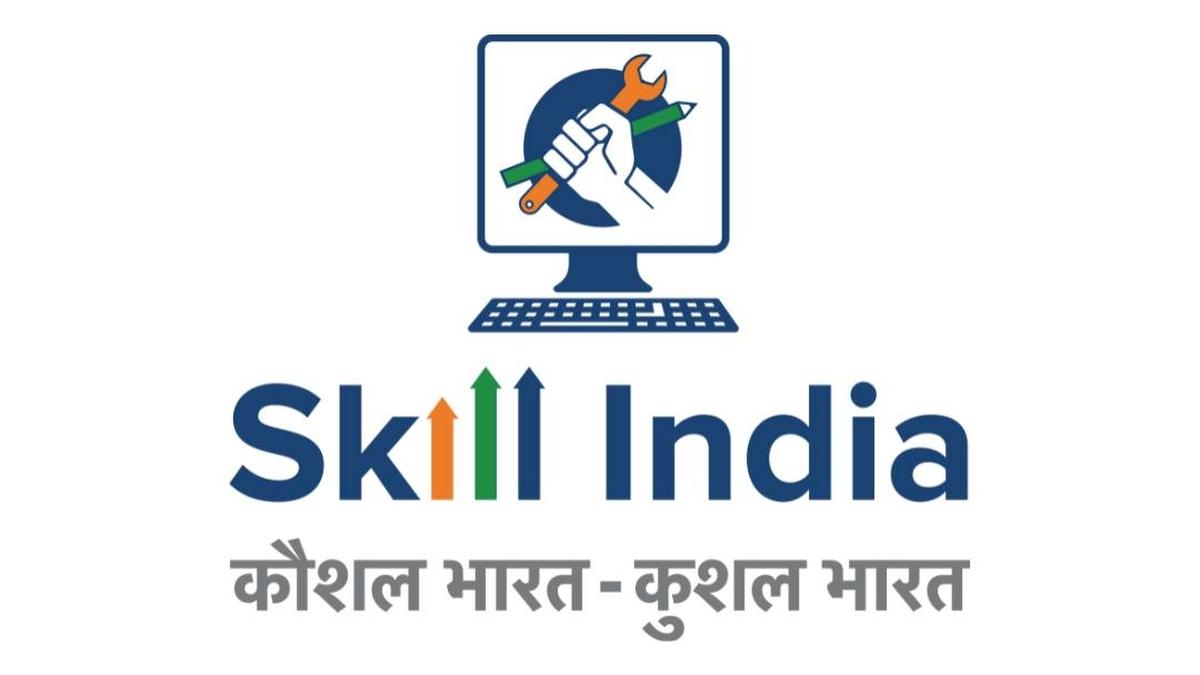
- 12 Feb 2025
In News:
The Union Cabinet has approved the continuation and restructuring of the Skill India Programme (SIP) till March 2026, with a financial outlay of ?8,800 crore.
The revamped programme consolidates three flagship schemes under a composite Central Sector Scheme—Pradhan Mantri Kaushal Vikas Yojana 4.0 (PMKVY 4.0), Pradhan Mantri National Apprenticeship Promotion Scheme (PM-NAPS), and Jan ShikshanSansthan (JSS)—with the aim to build a skilled, future-ready workforce.
Objectives and Vision
- Strengthen workforce development through industry-aligned, technology-enabled, and demand-driven skill training.
- Enhance global competitiveness, promote international mobility, and align with India's economic priorities such as Atmanirbhar Bharat, Make in India, and Digital India.
- Enable lifelong learning, skilling, reskilling, and upskilling through inclusive, flexible, and community-based training.
Beneficiaries and Coverage
- Over 2.27 crore individuals have benefited so far.
- Targeted age groups vary across schemes:
- PMKVY 4.0: 15–59 years
- PM-NAPS: 14–35 years
- JSS: 15–45 years
- Emphasis on marginalized sections, women, rural youth, aspirational districts, and the North-East Region.
Key Components of the Restructured Programme
1. Pradhan Mantri Kaushal Vikas Yojana 4.0 (PMKVY 4.0)
- Offers NSQF-aligned training via:
- Short-Term Training (STT)
- Special Projects (SP)
- Recognition of Prior Learning (RPL)
- Introduces 400+ new courses in emerging fields:
- Artificial Intelligence (AI), 5G, Cybersecurity, Green Hydrogen, Drone Technology.
- Establishment of Skill Hubs in premier institutions (IITs, NITs, JNVs, KendriyaVidyalayas, etc.).
- Focus on international mobility:
- Mobility Partnership Agreements (MMPAs), joint certifications, and language proficiency training.
- Blended learning models with digital delivery and regional language content.
- Integration with schemes such as PM Vishwakarma, PM Surya GharMuft Bijli Yojana, National Green Hydrogen Mission, and NAL JAL Mitra.
- Adoption of an Ease of Doing Business framework to reduce compliance burdens.
2. Pradhan Mantri National Apprenticeship Promotion Scheme (PM-NAPS)
- Promotes earn-while-you-learn through industry-specific apprenticeships.
- Government support of 25% stipend (up to ?1,500/month per apprentice) via Direct Benefit Transfer (DBT).
- Focus on both traditional and emerging sectors like AI, robotics, blockchain, green energy, and Industry 4.0.
- Encourages participation of MSMEs and enterprises in underserved regions.
3. Jan ShikshanSansthan (JSS) Scheme
- Community-based skilling for economically disadvantaged, rural youth, and women.
- Offers low-cost, flexible, doorstep training for both self-employment and wage-based livelihoods.
- Linked with initiatives such as PM JANMAN, ULLAS, and financial literacy campaigns.
- Also promotes awareness in health, hygiene, gender equality, and education.
Certification and Digital Integration
- All certifications are aligned with the National Skills Qualification Framework (NSQF).
- Integrated with DigiLocker and the National Credit Framework (NCrF), ensuring:
- Formal recognition of skills.
- Horizontal and vertical mobility in education and employment.
- Micro-credential courses (7.5 to 30 hours) and National Occupational Standards (NoS)-based training introduced.
Supporting Schemes and Initiatives
- SANKALP(Skill Acquisition and Knowledge Awareness for Livelihood Promotion).
- TEJAS (Skilling for international placement).
- Model Skill Loan Scheme.
Significance of Skill India Programme
- Demographic Dividend: With over 65% of India’s population below 35, the programme is pivotal in transforming potential into productivity.
- Employment & Entrepreneurship: Reduces unemployment through structured training, apprenticeships, and encourages skill-based startups.
- Global Workforce Readiness: Aligns with international standards, enabling Indian workers to access global job markets.
- Technological Preparedness: Equips the youth with skills in futuristic technologies.
- Inclusive Growth: Ensures urban-rural and gender-based equity in skilling access.
- Economic Impact: Supports India's manufacturing, IT, and services sectors, driving GDP growth.
India Achieves 100 GW Solar Power Capacity
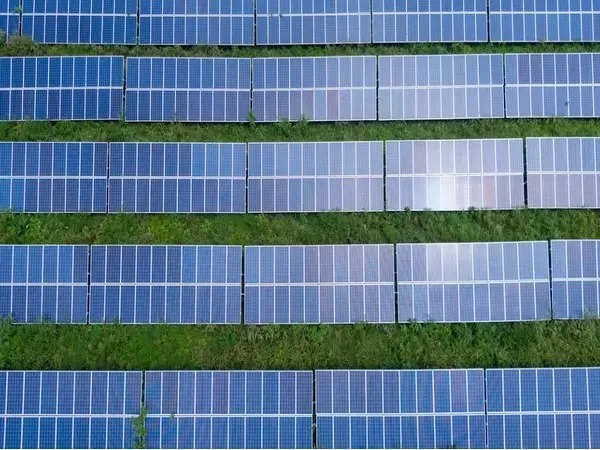
- 12 Feb 2025
In News:
India has officially surpassed 100 GW of installed solar power capacity as of January 31, 2025, marking a historic milestone in its clean energy journey. This achievement strengthens India’s position as a global leader in renewable energy and signifies major progress toward its ambitious target of 500 GW non-fossil fuel capacity by 2030, as outlined by Prime Minister Narendra Modi.
Union Minister of New and Renewable Energy, highlighted this milestone as a testament to India’s energy self-reliance, driven by key initiatives such as solar parks, rooftop solar schemes, and domestic solar manufacturing.
Growth Trajectory and Achievements
- Installed Capacity Growth:
- From 2.82 GW in 2014 to 100.33 GW in 2025 – a growth of 3450% over a decade.
- Solar energy now accounts for 47% of India’s total installed renewable energy capacity.
- Capacity Pipeline:
- 84.10 GW of solar under implementation.
- 47.49 GW under tendering.
- Including hybrid and RTC renewable projects, India has 296.59 GW of solar and hybrid projects in total.
- Record Additions in 2024:
- 24.5 GW solar capacity added, more than double from 2023.
- 18.5 GW utility-scale installations – a 2.8 times increase from 2023.
- 4.59 GW of rooftop solar added, a 53% increase over 2023.
- Top States in utility-scale solar growth:Rajasthan, Gujarat, Tamil Nadu, Maharashtra, and Madhya Pradesh.
Solar Manufacturing Boom
- Solar module production capacity has grown from 2 GW (2014) to 60 GW (2024).
- With continued policy support, India is targeting 100 GW of manufacturing capacity by 2030.
- This shift makes India a global hub for solar technology and reduces reliance on imports.
Major Government Initiatives Driving Solar Growth
- National Solar Mission (NSM) (2010):Set long-term targets, with 280 GW of solar capacity by 2030 under its ambit.
- PM SuryaGharMuft Bijli Yojana (2024):
- A game-changing rooftop solar scheme aiming to empower households with free, clean electricity.
- Nearly 9 lakh rooftop installations as of early 2025.
- PM-KUSUM Scheme:Promotes solar irrigation pumps and supports farmers with grid-connected solar systems.
- Solar Parks Scheme:Facilitates development of large-scale solar clusters in states to boost capacity.
- Production-Linked Incentive (PLI) Scheme:Incentivizes domestic manufacturing of solar PV modules.
- Net Metering Policy:Allows consumers to generate and export surplus solar power to the grid.
- International Solar Alliance (ISA):India-led global initiative fostering solar energy cooperation among solar-rich countries.
Benefits of Solar Energy for India
- Energy Security: Reduces dependence on fossil fuel imports.
- Environmental Gains: Cuts GHG emissions and combats climate change.
- Economic Boost: Millions of jobs created across installation, manufacturing, and maintenance.
- Affordability: Declining PV costs make solar a cost-effective energy source.
- Rural Electrification: Powers remote and off-grid regions, improving livelihoods.
Challenges and the Way Forward
- Land Acquisition: Scarcity of land hinders large-scale solar deployment.
- Grid Integration: Intermittency of solar power stresses the existing power grid.
- Finance & Investment: Scaling up infrastructure and storage requires sustained capital inflow.
- Storage Solutions: Affordable battery storage is essential for reliability and round-the-clock supply.
Cayman Islands
- 12 Feb 2025
In News:
A magnitude 7.6 earthquake recently struck the Caribbean Sea southwest of the Cayman Islands, as reported by the U.S. Geological Survey. While no tsunami warning was issued, tremors were felt across the region, and assessments of damage are ongoing.
Geographical and Geopolitical Overview
- The Cayman Islands is a British Overseas Territory located in the western Caribbean Sea, south of Cuba and northwest of Jamaica.
- It comprises three islands:
- Grand Cayman (largest and most populous)
- Cayman Brac
- Little Cayman
- The islands are part of the Cayman Ridge, an underwater mountain range, with the islands themselves being the emergent peaks of this ridgeline.
- Area: Only 264 sq. km
- Capital: George Town, located on Grand Cayman
- Official Language: English
- Currency: Cayman Islands Dollar (KYD)
- Ethnic Composition:
- Afro-European: 40%
- African: 20%
- European: 20%
- Other: 20%
Seismic and Climatic Features
- The islands are near the Cayman Trench, a deep subduction zone formed by the interaction between the North American and Caribbean Plates.
- Although major earthquakes are rare, the region is seismically active, and moderate to high seismic events are possible, such as the recent 7.6 magnitude quake.
- Climate: Tropical marine with a distinct wet and dry season; vulnerable to hurricanes, especially during the Atlantic hurricane season (June–November).
Ecological Significance
- Known for crystal-clear waters, coral reefs, and white sand beaches, the Cayman Islands are a global hub for marine biodiversity.
- Key ecological features include:
- Coral reefs, seagrass beds, and mangroves
- Famous dive sites like the Great Blue Hole and Bloody Bay Wall
- Terrestrial biodiversity is limited due to the islands’ small limestone-based land area, but they are home to endemic species such as the Grand Cayman Blue Iguana, which has recovered from critical endangerment through conservation efforts.
Economic Importance: A Global Financial Hub
- The Cayman Islands is renowned as a major offshore financial center and global tax haven.
- Zero taxation: No corporate, income, or capital gains tax
- Home to:
- Offshore banks
- Hedge funds
- Multinational corporations
- The islands offer a favorable regulatory environment and strict financial confidentiality laws, although they now comply with international transparency norms.
TROPEX-25
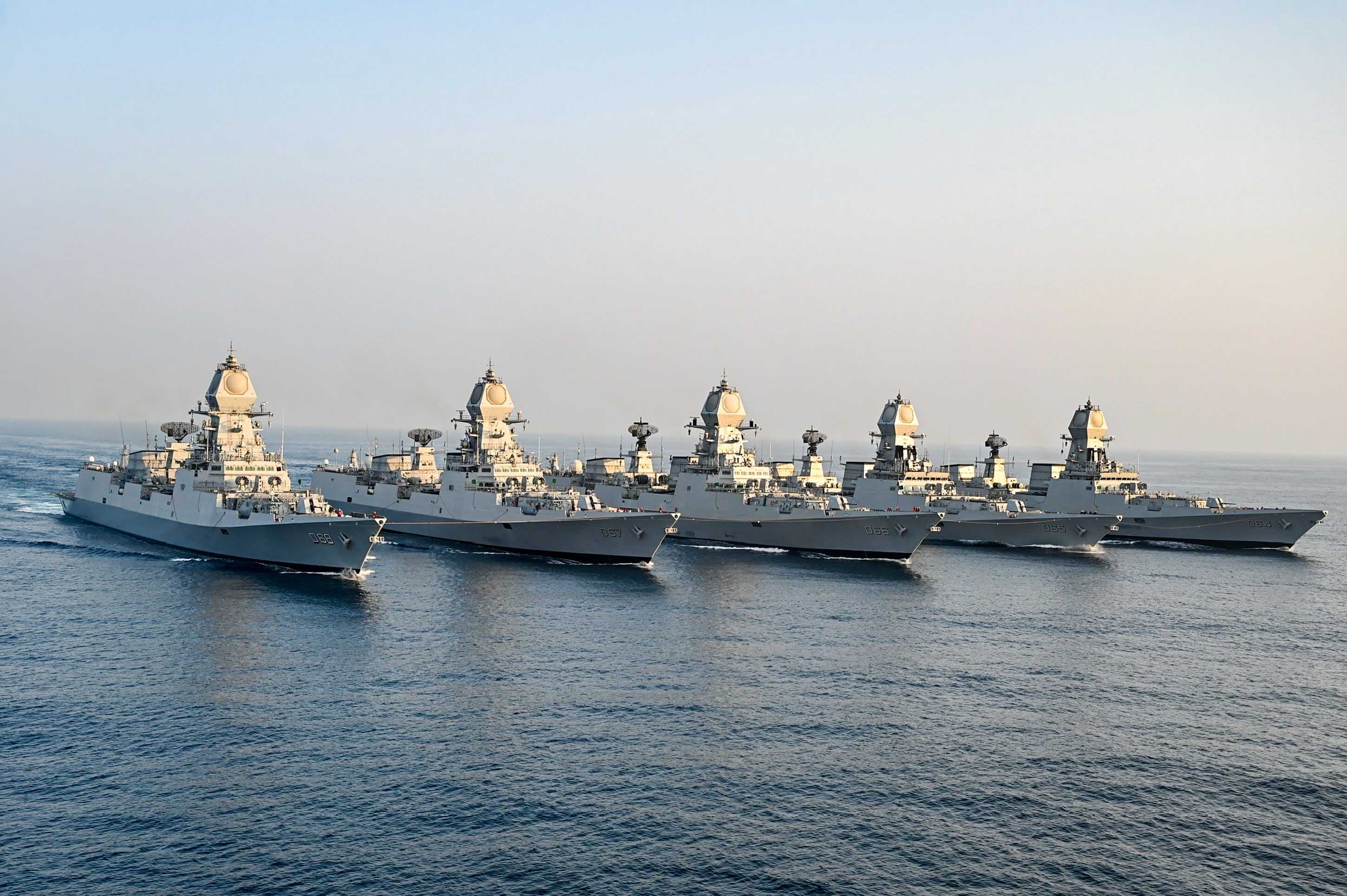
- 12 Feb 2025
In News:
The Indian Navy’s biennial TROPEX-25is currently underway in the Indian Ocean Region (IOR) from January to March 2025.
It is the Indian Navy’s largest maritime exercise, aimed at testing combat readiness and integrated warfighting capabilities across all domains.
About TROPEX
- Full Form: Theatre Level Operational Readiness Exercise (TROPEX)
- Frequency: Biennial (every two years)
- Lead Agency: Indian Navy
- Participants:
- Indian Navy (all operational units)
- Indian Army (IA)
- Indian Air Force (IAF)
- Indian Coast Guard (ICG)
Purpose and Strategic Objectives
TROPEX-25 aims to:
- Validate core warfighting skills of the Indian Navy.
- Ensure a synchronised, integrated response across services to defend India’s maritime interests.
- Simulate real-time operations in a contested maritime environment, including conventional, asymmetric, and hybrid threats.
- Enhance jointness, interoperability, and combat synergy among the three armed forces and the Coast Guard.
Duration and Operational Scope
- Timeline: January to March 2025 (Three months)
- Location: Various sectors across the Indian Ocean Region (IOR)
- Phases:
- Harbour Phase: Planning and coordination activities.
- Sea Phase: Execution of complex naval and joint operations.
- Joint Work-Up Phase: Includes cyber and electronic warfare, and live weapon firings.
- AMPHEX (Amphibious Exercise): Integrated amphibious operations.
Key Features
- Integrated Combat Operations: Real-time execution of multi-domain missions
- Cyber and Electronic Warfare: Tactical simulations of modern non-kinetic threats
- Live Weapon Firings: Enhancing target precision and battle readiness
- Inter-Service Jointness: High-level coordination across the Navy, Army, Air Force, and Coast Guard
- Maritime Domain Awareness: Surveillance and security operations over vast maritime stretches
Strategic Significance
- Reinforces India’s commitment to safeguarding maritime sovereignty and strategic interests in the Indian Ocean.
- Enhances forward-deployment strategies, logistics, and sustained operations far from the mainland.
- Demonstrates India’s ability to operate “Anytime, Anywhere, Anyhow” in support of national security.
Prime Minister’s 15-Point Programme for Minorities
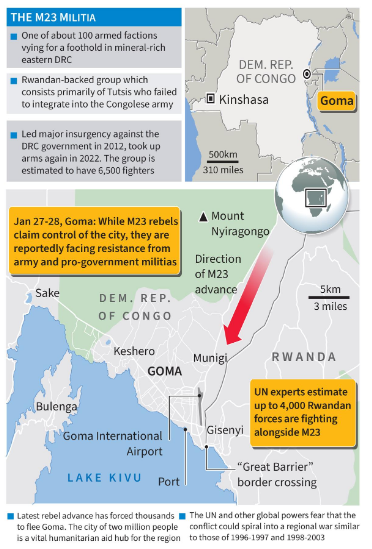
- 11 Feb 2025
In News:
The Prime Minister’s New 15 Point Programme for welfare of Minorities is a programme which covers various schemes/initiatives of the participating Ministries/Departments with an aim to ensure that the underprivileged and weaker sections of six centrally notified minority communities have equal opportunities for availing the various Government welfare Schemes and contribute to the overall socio-economic development of the Country.
Key Highlights:
The programme has the following broad objectives:
- Enhancing opportunities for education
- Ensuring an equitable share for minorities in economic activities and employment, through existing and new schemes, enhanced credit support for self-employment, and recruitment to State and Central Government jobs
- Improving the conditions of living of minorities by ensuring an appropriate share for them in infrastructure development schemes
- Prevention and control of communal disharmony and violence.
The schemes of the Ministry of Minority Affairs covered under the Prime Minister’s 15 Point Programme are exclusively meant for notified minorities. However, 15% of the outlays and targets, to the extent possible, of schemes/initiatives implemented by other participating Ministries/Departments are earmarked for notified minorities.
The welfare schemes, including initiatives for education and skill development of minorities, being implemented by Ministry of Minority Affairs and other participating ministries under the programme, are as under:
- Pre-Matric Scholarship Scheme
- Post-Matric Scholarship Scheme
- Merit-cum- Means based Scholarship Scheme
- National Minorities Development Finance Corporation (NMDFC) Loan Schemes
- Samagra Shiksha Abhiyaan (M/o Education)
- DeenDayalAntyodaya Yojana (DAY-NRLM)- (M/o Rural Development)
- DeenDayal Upadhyay – GraminKaushalya Yojana (M/o Rural Development)
- Pradhan Mantri Awaas Yojana (M/o Rural Development)
- DeenDayalAntyodaya Yojana - National Urban Livelihoods Mission (M/o Housing & Urban Affairs)
- Priority Sector Lending by Banks (Department of Financial Services)
- Pradhan Mantri Mudra Yojana (Department of Financial Services)
- POSHAN Abhiyaan (Ministry of Women & Child Development)
- National Health Mission (Department of Health & Family Welfare)
- Ayushman Bharat (Department of Health & Family Welfare)
- National Rural Drinking Water Programme (Jal Jeevan Mission), (Department of Drinking Water & Sanitation)
The Schemes are being implemented by the respective Ministries/Departments under the saturation approach of Government. Under the saturation approach of the Government many of the components have achieved mainstreaming.
SwavalambiniProgramme
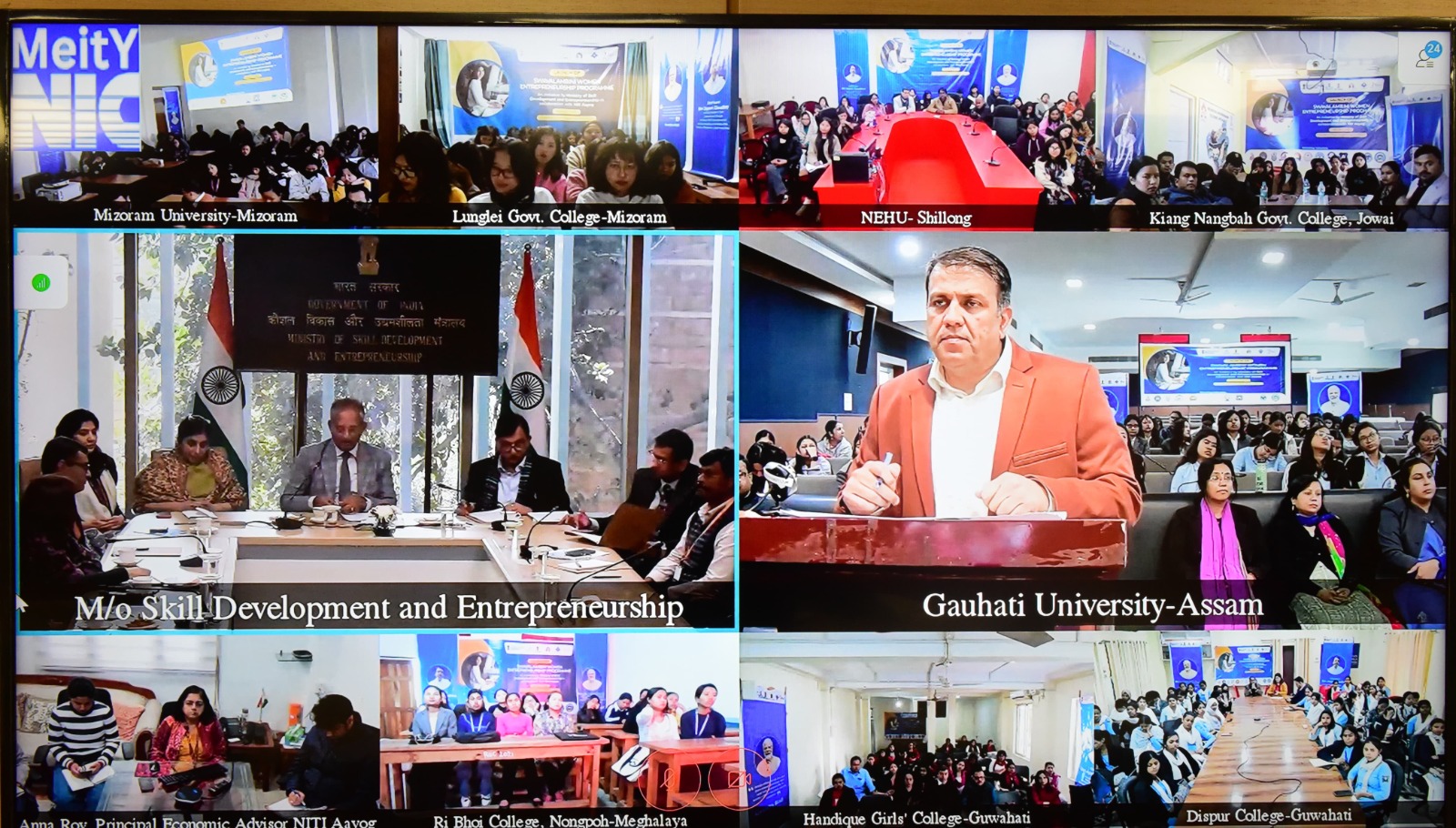
- 11 Feb 2025
In News:
The SwavalambiniProgramme, launched by the Ministry of Skill Development and Entrepreneurship (MSDE) in collaboration with NITI Aayog, is a pioneering initiative aimed at empowering women in the Northeast.
This programme targets female students in select Higher Education Institutions (HEIs) in Assam, Meghalaya, and Mizoram, providing them with an entrepreneurial mindset, essential resources, and ongoing mentorship to ensure their success in entrepreneurial ventures.
Programme Structure and Implementation
The programme follows a structured, stage-wise entrepreneurial process to guide participants through the various phases of business creation, from awareness to development, mentorship, and funding. It includes the following key components:
- Entrepreneurship Awareness Programme (EAP): Introduces 600 female students to entrepreneurship as a viable career option. The programme involves a 2-day session covering foundational entrepreneurial concepts and opportunities.
- Women Entrepreneurship Development Programme (EDP): This intensive 40-hour training is offered to 300 selected students, covering crucial aspects of business, including:
- Business training and skilling
- Access to finance and market linkages
- Compliance and legal support
- Networking opportunities
- Mentorship: After completing the training, participants receive six months of mentorship to help them translate their ideas into sustainable business ventures.
- Faculty Development Programme (FDP): A 5-day FDP will upskill faculty members in HEIs, enabling them to effectively mentor students in entrepreneurship. The training focuses on industry insights, business incubation strategies, and coaching techniques.
- Award to Rewards Initiative: Successful ventures will be recognized and awarded, inspiring others and fostering a culture of women-led enterprises.
Expected Outcomes and Impact
- The SwavalambiniProgramme aims to promote entrepreneurship among women, with an expectation that 10% of EDP trainees will successfully launch their businesses.
- It strives to establish a clear framework for nurturing and scaling women-led enterprises in India.
- The initiative contributes to economic transformation by making entrepreneurship a viable career path for women, particularly in the Northeast, a region brimming with untapped entrepreneurial potential.
Alignment with National Policies
The SwavalambiniProgramme aligns with several national initiatives and policies aimed at promoting women entrepreneurship:
- National Education Policy (NEP) 2020: The programme complements the NEP’s vision by integrating skill development, industry collaboration, and entrepreneurship-driven education within HEIs.
- Women Entrepreneurship Schemes: It strengthens existing initiatives like Start-Up India, Stand-Up India, PM Mudra Yojana, and the Women Entrepreneurship Platform, providing financial and mentorship support to emerging women entrepreneurs.
- Union Budget 2025: The ?10,000 crore start-up fund and the extension of the 100% tax exemption on start-up profits for five years in the Union Budget 2025 offer crucial financial backing for women-led enterprises.
Launch and Regional Focus
The programme was officially launched across nine colleges and universities in the Northeast, including Gauhati University, North-Eastern Hill University (NEHU), Mizoram University, and others.
National Commission for SafaiKaramcharis (NCSK)
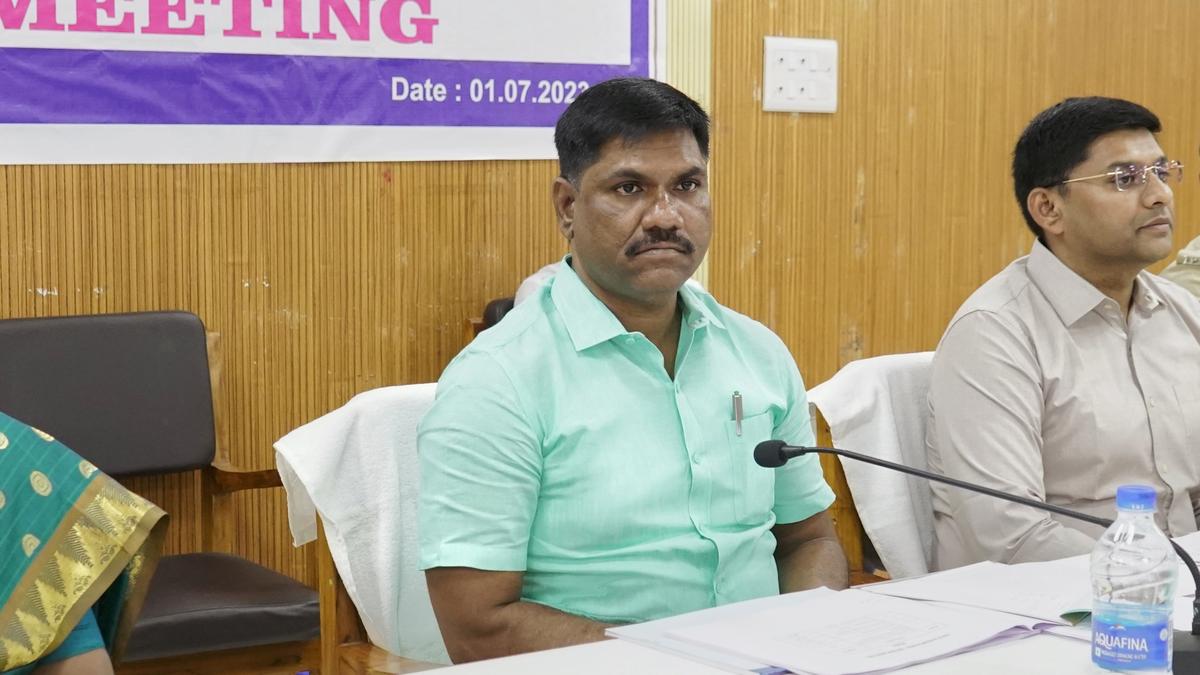
- 11 Feb 2025
In News:
The Union Cabinet, on February 7, 2025, approved the extension of the tenure of the National Commission for SafaiKaramcharis (NCSK) for three years beyond March 31, 2025, i.e., up to March 31, 2028.
The move is aimed at sustaining efforts to eradicate manual scavenging, improve the welfare of sanitation workers, and achieve zero fatalities in hazardous cleaning activities. The extension involves a financial outlay of ?50.91 crore.
Background and Legal Status
- Constitution: NCSK was established in August 1994 under the National Commission for SafaiKaramcharis Act, 1993 as a statutory body.
- Post-2004 Status: The statutory Act lapsed in 2004, and since then, NCSK has functioned as a non-statutory body under the Ministry of Social Justice and Empowerment, with periodic extensions.
- Current Demand: The current Chairperson, M. Venkatesan, has welcomed the extension but stressed the need for granting statutory status to the commission to enhance its authority and effectiveness.
Mandate and Functions
As per Government Notification and MS Act, 2013:
- Policy Recommendations:Recommend specific programmes of action to eliminate inequalities in the status, facilities, and opportunities of SafaiKaramcharis.
- Monitoring and Evaluation:
- Study and evaluate implementation of welfare schemes and programmes.
- Monitor working conditions, including health, safety, and wages of sanitation workers.
- Grievance Redressal:
- Investigate specific complaints and take suomotu cognizance of non-implementation of policies or schemes related to SafaiKaramcharis.
- Report to governments on issues affecting SafaiKaramcharis.
- Role under the Prohibition of Employment as Manual Scavengers and their Rehabilitation Act, 2013:
- Monitor the implementation of the Act.
- Enquire into violations, and convey findings with recommendations to authorities.
- Advise the Centre and States on effective implementation.
- Take suomotu notice of non-compliance.
- Data Collection:
- NCSK remains the only national body tracking sewer and septic tank deaths.
Significance of the Extension
- Aims to improve working conditions in the sanitation sector.
- Supports the socio-economic upliftment of one of the most marginalized communities in India.
- Enhances implementation of manual scavenging prohibition laws.
- Facilitates rehabilitation and dignity for sanitation workers.
- Aligns with the broader vision of inclusive development and social justice.
Pinaka Multiple Rocket Launch System (MRLS)
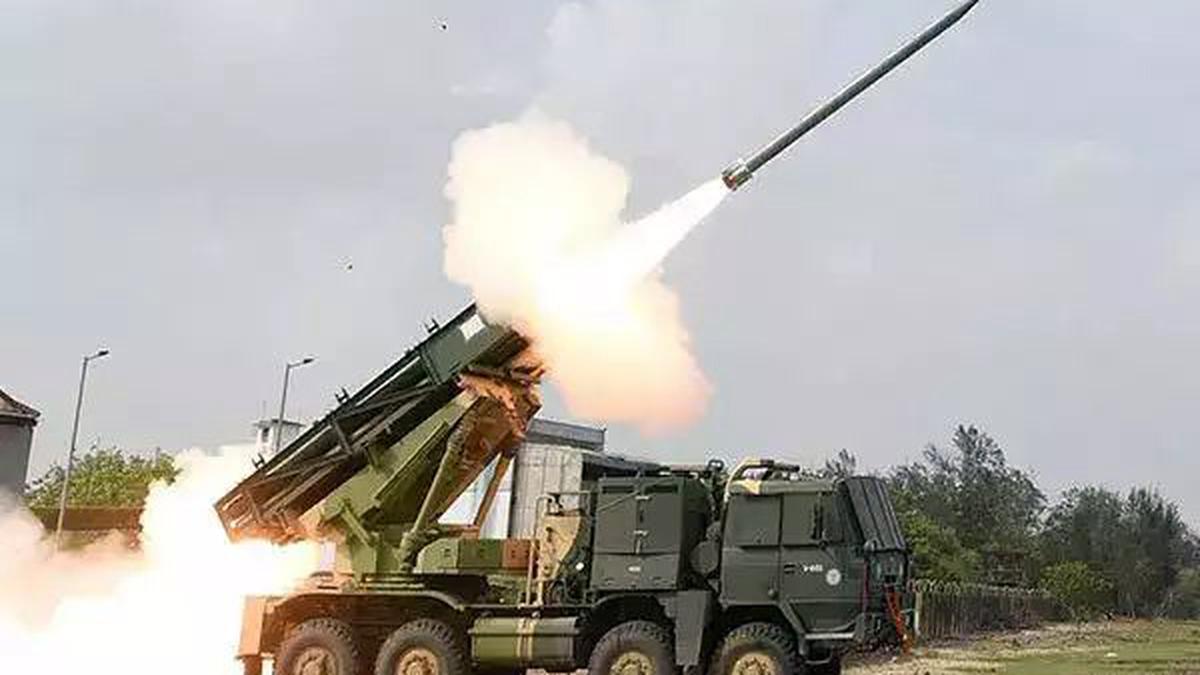
- 11 Feb 2025
In News:
In a significant step towards modernizing India's artillery capabilities, the Union Ministry of Defence signed contracts worth ?10,147 crore on February 6, 2025, for the procurement of advanced ammunition for the Pinaka Multiple Rocket Launch System (MRLS).
These agreements were concluded with Economic Explosives Limited (EEL) and Munitions India Limited (MIL) for the acquisition of Area Denial Munition (ADM) Type-1 and High Explosive Pre-Fragmented (HEPF)-Mk-1 (enhanced) rockets, respectively.
Pinaka MRLS: An Overview
- Type: All-weather, battle-proven, indirect fire Artillery Weapon System.
- Developer: Armament Research and Development Establishment (ARDE) of DRDO.
- Combat History: First used effectively during the Kargil War, neutralising enemy positions on mountain tops.
- Mobility: Mounted on Tatra trucks, providing high mobility and quick deployment.
- Payload & Firing Capacity:
- Each launcher: 12 rockets.
- Each battery: 6 launchers = 72 rockets.
- Capable of delivering a full salvo in 44 seconds.
- Range:
- Initial range: 60–75 km.
- Guided Pinaka (Pinaka-G) extends range to 75 km, with future plans to extend up to 120 km and eventually 300 km.
- Precision: The guided version uses INS/GPS navigation, allowing high accuracy against critical and time-sensitive targets.
- Warhead Types: High-explosive and submunitions, suitable for a wide variety of targets.
New Ammunition Contracts: Enhancing Lethality
The contracts include the procurement of:
- ADM Type-1: Equipped with specialised warheads designed to disperse sub-munitions over wide areas. These are effective in targeting mechanised formations, vehicles, and personnel, thereby denying area access to the enemy. These are similar to Dual Purpose Improved Conventional Munitions (DPICM).
- HEPF-Mk-1 (Enhanced): An advanced variant of the currently used HEPF rockets with extended range and improved lethality, capable of deep precision strikes in enemy territory.
In addition, a contract was signed with Bharat Electronics Limited (BEL) for upgrades to the Shakti software, which supports artillery operations.
Operational & Strategic Significance
- The upgraded Pinaka system will be the mainstay of long-range rocket artillery in the Indian Army.
- Four Pinaka regiments are already operational, with six more on order.
- The system’s development and expansion are a testament to India’s defenceindigenisation drive.
- The DRDO successfully completed flight tests of the guided Pinaka rocket with a range of 75 km, doubling its earlier reach. Future versions aim for up to 120 km and 300 km range.
Employment and MSME Impact
Besides enhancing strategic deterrence, the ?10,147 crore investment is expected to:
- Generate direct and indirect employment, particularly in the defence manufacturing ecosystem.
- Promote the Indian MSME sector, which contributes components and subsystems for the rockets and launchers.
- Support the vision of Atmanirbhar Bharat by reducing dependency on imported artillery systems.
Pong Dam Lake Wildlife Sanctuary
- 11 Feb 2025
In News:
Pong Dam Lake Wildlife Sanctuary, located in the Kangra district of Himachal Pradesh, has witnessed a record-breaking influx of migratory birds in 2025, according to the latest annual bird census conducted on February 1, 2025.
The sanctuary, a designated Ramsar Site (since 2002) and a Wetland of National Importance (1994), recorded a total of 1,53,719 birds across 97 species, indicating a sharp rise in avifaunal population and reaffirming its ecological significance.
Key Highlights from the 2025 Census
- Migratory birds recorded: 1,44,371 individuals from 55 species.
- Total bird count: 1,53,719 birds from 97 species.
- Increase from 2024: 83,555 more birds.
- Bar-headed Goose population: 90,959 (up from 37,501 in 2024) — highest ever recorded since the census began in 2004.
Other dominant waterfowl included:
- Eurasian Coots – 10,785
- Common Pochards – 9,692
- Common Teals – 8,497
- Northern Pintails – 8,053
Lesser-spotted species included the Greater and Lesser White-fronted Goose, Red Crested Pochard, and Northern Lapwing.
Reasons Behind the Surge
- Experts attribute the significant increase in bird numbers to a decline in the water level of Pong Dam Lake, which exposed additional lakebed areas, creating new feeding grounds. This has made the sanctuary increasingly attractive to birds migrating from Tibet, Central Asia, Russia, Siberia, and the Trans-Himalayan region.
Survey and Conservation Collaboration
- The census was conducted by over 100 participants, including officials from the Himachal Pradesh Forest Department, experts from the Bombay Natural History Society, Wildlife Institute of India, and local birdwatchers. The sanctuary was divided into 25 zones for comprehensive coverage.
- To further conservation efforts, a new Interpretation Centre was inaugurated on January 18, 2025, aimed at promoting awareness about the wetland's role in sustaining biodiversity and supporting migratory birds.
Ecological and Geographical Profile
Pong Dam Lake (Maharana Pratap Sagar)
- Type: Manmade reservoir formed by construction of Pong Dam on the Beas River.
- Location: Wetland zone of the Shivalik hills, Kangra district, Himachal Pradesh.
- Area: Approx. 307 sq. km — among the largest man-made wetlands in northern India.
- Importance: Key stopover on the Trans-Himalayan flyway for migratory birds.
Flora
- Vegetation types: Submerged aquatic vegetation, grasslands, forests.
- Dominant species:Eucalyptus, Acacia, Shisham.
Fauna
- Avifauna: Over 220 bird species recorded; 54 waterfowl species.
- Notable birds: Bar-headed Geese, Pintails, Pochards, Coots, Grebes, Cormorants, Herons, Storks, Grey Partridge, Peafowl.
- Mammals: Sambar, Barking Deer, Nilgai, Wild Boar, Clawless Otter, Leopard.
Rhododendron wattii
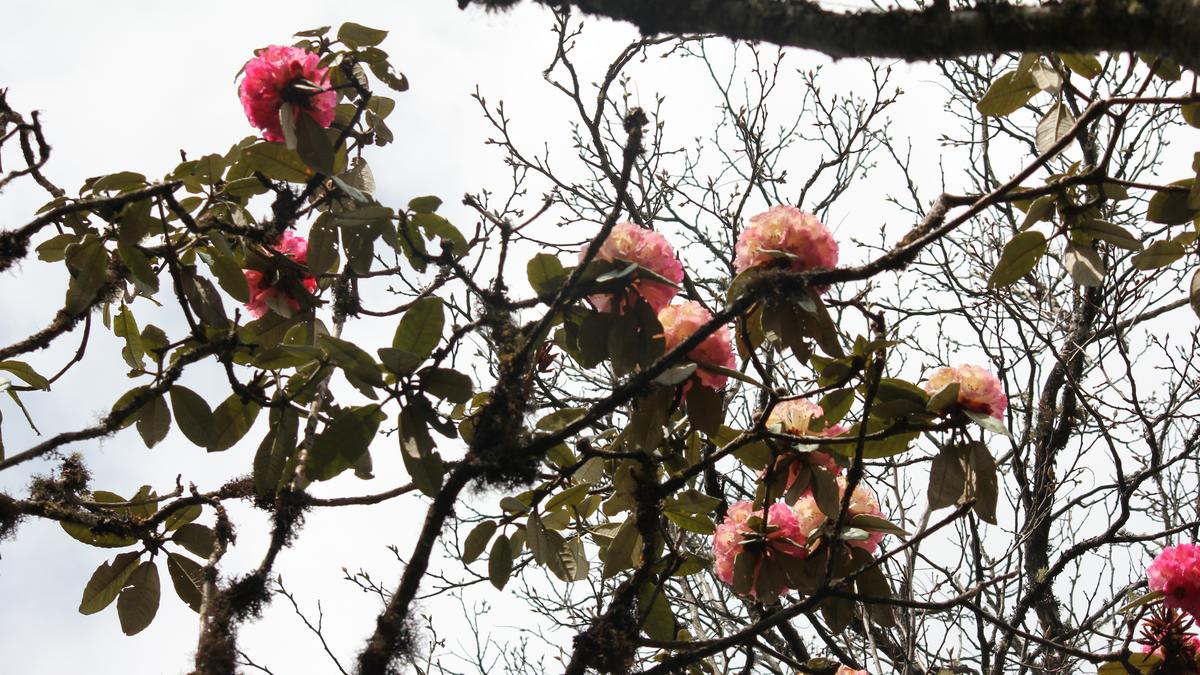
- 10 Feb 2025
In News:
A recent study has highlighted the alarming decline of the rare Rhododendron wattii, a species endemic to Nagaland and Manipur, especially in the Dzukou Valley, Nagaland. The species is now on the brink of extinction due to severe threats to its survival, raising serious conservation concerns.
Botanical Profile
- Taxonomy and Discovery:
- First collected by Sir George Watt during his 1882–85 survey in the Japfu Hill range, Nagaland.
- Belongs to the Rhododendron genus, which has over 1,000 species worldwide.
- India hosts 132 taxa, of which 129 are found in the northeastern region.
- Growth and Habitat:
- Grows as a small tree or shrub in the temperate biome.
- Attains a maximum height of 25 feet.
- Endemic to Manipur and Nagaland, predominantly in the Dzukou Valley at ~2,600 metres altitude.
- Phenological Features:
- Evergreen plant with year-round leaf renewal.
- Flowering: Late February to April.
- Fruiting:April to December.
- Produces trusses of 18–25 pink flowers with dark flecks and purplish basal blotches.
- Pollinated by the Fire-tailed Sunbird (Aethopygaignicauda) and bumble bees.
Conservation Concerns:
- Conservation Status:
- Listed as Vulnerable by the IUCN Red List due to:
- Severe population fragmentation.
- Area of occupancy less than 500 sq. km.
- Botanists at the Botanical Survey of India consider it Critically Endangered in its natural habitat.
- Listed as Vulnerable by the IUCN Red List due to:
- Threats to Survival:
- Poor seedling survivability despite abundant seed production.
- Anthropogenic pressures such as:
- Deforestation
- Habitat destruction
- Use of trees for firewood by local communities.
- Wildfires: A major fire incident in 2020–21 severely impacted the Dzukou Valley.
- The lone surviving Rhododendron wattii tree was recorded far from human trails during a recent field study.
Recent Study Highlights:
- Conducted by Imtilila Jing and S.K. Chaturvedi of Nagaland University.
- Published in the Journal of Threatened Taxa.
- Found only one living tree in the surveyed area of 27 sq. km of Dzukou Valley.
- The last previously reported tree in Nagaland (2012–13) was cut down.
Additional Botanical Development in the Region:
While the situation of Rhododendron wattii is grim, the region also witnessed a positive botanical development:
- Discovery of Phalaenopsis wilsonii, a new orchid species in Manipur’s Senapati district.
- Identified by researchers from the Institute of Bioresources and Sustainable Development (IBSD), Imphal.
- It is the ninth species of the Phalaenopsis genus recorded in Manipur.
GREAT Scheme
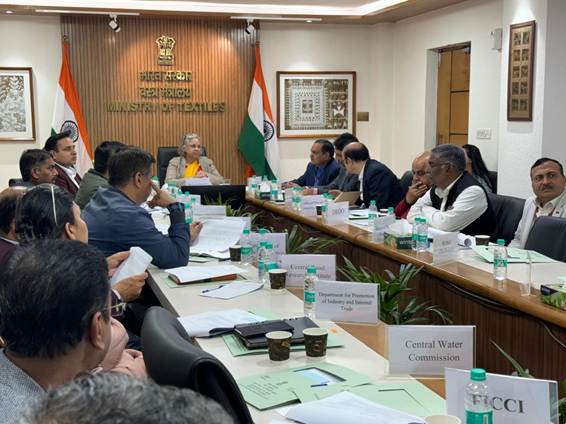
- 10 Feb 2025
In News:
The Grant for Research & Entrepreneurship across Aspiring Innovators in Technical Textiles (GREAT) scheme, launched in August 2023 under the National Technical Textiles Mission (NTTM), aims to promote startup-led innovation and entrepreneurship in the rapidly growing sector of technical textiles in India.
As of February 2025, the government has approved four startups under the scheme, providing them with financial assistance to develop commercially viable innovations.
About the GREAT Scheme:
- Objective: To encourage young innovators, scientists, and startups in the technical textiles domain to convert ideas into market-ready products or functional prototypes.
- Implementation: Operated by the Ministry of Textiles under the R&D and Innovation Component of the NTTM.
- Financial Support:
- Grants of up to Rs.50 lakh for a period of up to 18 months.
- 10% upfront contribution from startups (e.g., ?5 lakh for a ?50 lakh grant).
- No royalty or equity required by the government.
- Approved Projects: Focus areas include Medical Textiles, Industrial Textiles, and Protective Textiles.
Complementary Initiatives under NTTM:
Academic and Skill Development:
- Education Institutes:
- ?6.5 crore approved for 3 academic institutes, including IIT Indore and NIT Patna, to introduce new courses in Geotextiles, Sports Textiles, Protective Textiles, and more.
- Skill Training:
- 12 Skill Development Courses launched across application areas such as Medical, Agricultural, Mobile, and Protective Textiles.
- Developed by leading Textile Research Associations: SITRA, NITRA, and SASMIRA.
- Aim to train stakeholders across the technical textile value chain.
National Technical Textiles Mission (NTTM): An Overview
- Launched: 2020
- Nodal Ministry: Ministry of Textiles
- Total Outlay: ?1,480 crore
- Mission Goals:
- Make India a global leader in technical textiles.
- Expand the market size to $40–50 billion with 15–20% annual growth.
- Increase domestic penetration and usage of high-performance technical textiles.
Four Key Components:
- Research, Innovation, and Development
- Promotion and Market Development
- Export Promotion
- Education, Training, and Skill Development
- Sectoral Focus:Agro-textiles, Geotextiles, Medical Textiles, Industrial Textiles, Mobile Textiles, Home Textiles, Sports Textiles, Protective Textiles, and others.
- Policy Support:Includes integration with PLI schemes, PM MITRA Parks, and formulation of quality control regulations to strengthen manufacturing capabilities.
Significance for India’s Development:
- Encourages Atmanirbhar Bharat through self-reliant manufacturing and innovation.
- Strengthens India's competitiveness in high-end technical textiles for defense, healthcare, agriculture, infrastructure, and disaster response.
- Bridges the gap between lab-level R&D and market-ready products, especially by supporting startups in early innovation stages.
Grameen Credit Score

- 10 Feb 2025
In News:
The Union Budget 2025–26 introduced the Grameen Credit Score (GCS) framework as a targeted initiative to enhance access to formal credit for Self-Help Groups (SHGs) and the rural population. It reflects the government’s commitment to financial inclusion, rural empowerment, and inclusive development.
What is the Grameen Credit Score?
- The Grameen Credit Score is a rural-specific credit evaluation framework being developed by Public Sector Banks.
- It aims to formalize the credit behavior and transaction history of SHG members and rural individuals, especially women entrepreneurs, and integrate them into India’s central credit ecosystem.
- Unlike conventional credit scores (like CIBIL or CRIF Highmark), GCS is tailored to assess creditworthiness based on local financial behavior, such as SHG repayment records, informal lending history, and community participation.
Key Features and Objectives:
- Improved Credit Assessment:
- Bridges the gap in the current credit bureau systems, which often overlook rural borrowers and SHG members.
- Uses digital records and behavioral insights to provide a customized and accurate credit profile.
- Financial Inclusion:
- Targets women-led SHGs to provide better access to loans, credit cards, and microfinance products.
- Encourages rural borrowers to understand and monitor credit scores, EMIs, and repayment cycles.
- Customized Financial Products:
- Linked with the introduction of custom credit cards for micro-enterprises with credit limits of up to ?5 lakh.
- Facilitates product innovation for grassroots entrepreneurs in agriculture, MSMEs, and allied sectors.
- Support for Broader Rural Ecosystems:
- Integrated with initiatives like the SVAMITVA Scheme for property records digitization.
- Complements reforms like the transformation of India Post into a rural logistics backbone and support for cooperative sectors via the NCDC.
- Economic Empowerment:
- By expanding credit access and improving repayment discipline, GCS is expected to:
- Boost rural entrepreneurship
- Strengthen economic resilience of rural households
- Support the long-term development of the rural economy
- By expanding credit access and improving repayment discipline, GCS is expected to:
Impact on Rural Development and SHGs:
- Empowers rural women through financial independence and enterprise development.
- Enhances formal credit linkage of SHGs, reducing reliance on informal moneylenders.
- Promotes financial literacy and long-term economic stability in villages.
- Aims to be a catalyst for poverty alleviation and inclusive growth.
Gaia Black Holes

- 10 Feb 2025
In News:
The European Space Agency’s Gaia mission, launched in 2013, continues to redefine our understanding of the Milky Way by detecting celestial phenomena through precise astrometry.
One of its most significant contributions has been the discovery of dormant stellar-mass black holes that are not associated with X-ray emissions—previously the main detection method. These discoveries represent a paradigm shift in black hole detection and open new avenues for astrophysical research.
Gaia BH Series: Discovery and Significance
Gaia BH1
- Discovery Year: 2022
- Location: ~1,560 light years from Earth in the Ophiuchus constellation
- Significance:
- Closest known black hole to Earth
- Detected via a yellow star orbiting a dark mass, whose high orbital velocity implied the presence of a black hole nearly nine times the mass of the Sun
- Validated using data from LAMOST (China) and Magellan Clay Telescope (Chile)
Gaia BH2
- Discovery Year: 2023
- Location: ~3,800 light years away in the Centaurus constellation
- Mass: Around nine solar masses
- Observation Method: Tracked motion of a luminous star orbiting an unseen massive companion
Gaia BH3 – A Landmark Discovery
- Discovery Year: 2024
- Distance from Earth: ~1,926 light years (~2,000 light years), making it the second closest black hole
- Location:Aquila constellation, in the Milky Way’s outer regions
- Mass: ~33 times the mass of the Sun, making it the largest known stellar-mass black hole in the Milky Way
- Orbital Partner: A yellow giant star orbiting every 11.6 years, with an average separation similar to the Sun-Uranus distance
- Special Traits:
- It is a dormant or passive black hole, not actively accreting matter
- Lacks X-ray emissions, suggesting a scarcity of surrounding material
- Its companion star’s chemical composition indicates ancient origins, hinting that such massive black holes were formed early in the universe
Scientific Implications:
- Detection Technique Innovation:Gaia uses astrometric mapping to track the apparent motion of stars across the sky. When a star appears to orbit "empty space," astronomers infer the presence of a massive object—typically a black hole—using Kepler’s laws and the Doppler effect.
- Redefining Black Hole Census:Most black holes were previously detected through X-ray emissions. Gaia has revealed non-emitting black holes, indicating a possibly larger hidden black hole population in our galaxy.
- Historical Linkage:Black holes with masses above 30 solar masses were previously only observed through gravitational waves (LIGO/VIRGO, 2015). Gaia BH3 now provides a local, observable counterpart.
India-Japan Steel Dialogue
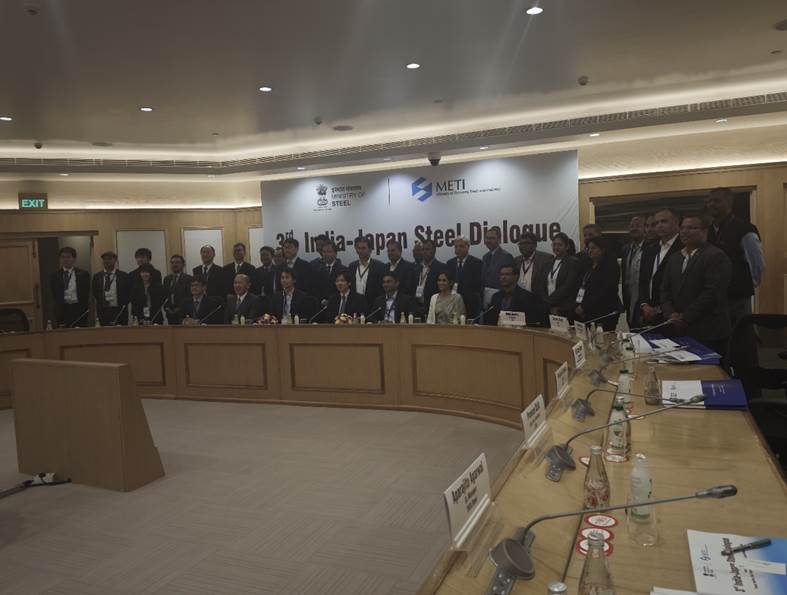
- 10 Feb 2025
In News:
The 3rd India-Japan Steel Dialogue was held on February 4, 2025, at Vigyan Bhavan, New Delhi, as part of the institutional mechanism under the Memorandum of Cooperation (MoC) signed between the two nations in December 2020. The dialogue was co-chaired by senior officials from India’s Ministry of Steel and Japan’s Ministry of Economy, Trade and Industry (METI).
Key Highlights and Strategic Focus Areas:
- Bilateral Steel Cooperation:The dialogue served as a platform to deepen cooperation in areas such as technology exchange, workplace safety, product diversification, and capacity building. Both nations reviewed progress under existing initiatives and reaffirmed commitment to long-term collaboration in the steel sector.
- Ease of Doing Business & Investment Support:India reiterated its commitment to facilitating ease of doing business for Japanese companies, while Japan assured continued technological and financial support for investments in advanced steel technologies in India.
- Sustainable Steel Production:India showcased recent initiatives like the Green Steel Report and the Taxonomy of Green Steel, underlining efforts to align steel production with sustainability goals and climate commitments.
- Demographic & Market Advantages:The Indian delegation highlighted the growing domestic demand driven by infrastructure investments, and the potential of India’s demographic dividend to attract foreign investment in the steel sector.
- Global Regulatory Issues – EU CBAM:Both sides discussed the European Union’s Carbon Border Adjustment Mechanism (EU CBAM), which seeks to impose carbon pricing on imports in sectors such as iron and steel, aluminum, cement, fertilizers, electricity, and hydrogen.
- CBAM Phase Timeline:
- Transitional Phase: 2023–2025 (reporting obligations)
- Full Implementation: From 2026 (financial obligations imposed)
- CBAM Phase Timeline:
Relevance:
CBAM has major implications for international steel trade, necessitating cleaner production methods and greater transparency in carbon emissions data.
Brucellosis Outbreak in Kerala
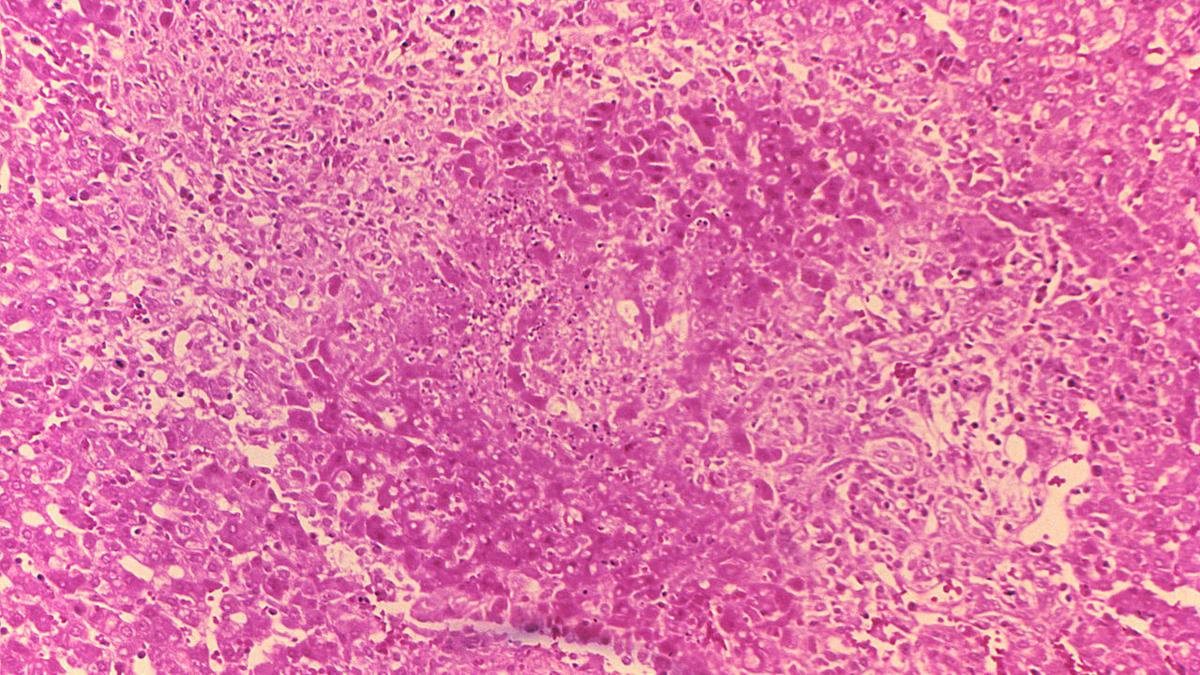
- 08 Feb 2025
In News:
An eight-year-old girl, Shasa Fathima, from Kottakkal in Malappuram district, Kerala, recently died after undergoing nearly two months of treatment for brucellosis at the Government Medical College Hospital, Kozhikode. This tragic incident has renewed public health concerns regarding zoonotic infections in India.
What is Brucellosis?
According to the World Health Organization (WHO), brucellosis is a bacterial disease caused by various species of the genus Brucella. The bacteria primarily infect: cattle, swine, goats, sheep & dogs.
Humans typically contract the infection through:
- Direct contact with infected animals or their secretions (blood, placenta, fetus, uterine fluids)
- Ingestion of contaminated animal products, especially unpasteurised milk and cheese
- Inhalation of airborne bacteria (e.g., in lab or farm environments)
Human-to-human transmission is extremely rare, as per WHO guidelines.
Symptoms and Incubation Period
- The disease presents a wide spectrum of symptoms: fever, weakness, weight loss, general discomfort or malaise.
- In many cases, symptoms may be mild or go undiagnosed. The incubation period ranges from one week to two months, most commonly between two to four weeks.
At-Risk Populations
- Brucellosis can affect individuals of all age groups. However, certain occupational groups are at higher risk, including: farmers and dairy workers, butchers, hunters, veterinarians, laboratory personnel. These individuals are often exposed to animal blood and reproductive fluids, which are primary modes of transmission.
Status in Kerala
Kerala has reported sporadic cases of brucellosis in recent years. In 2023, cases emerged from Kollam (July) and Thiruvananthapuram (October). While the disease is not new to the state, fatalities remain rare.
In response, the Department of Animal Husbandry has initiated awareness campaigns for dairy farmers and conducted milk sample testing across cooperative societies to monitor possible sources of infection.
Treatment and Prevention
Treatment typically involves a combination of antibiotics:
- Doxycycline (100 mg, twice daily for 45 days)
- Streptomycin (1 g daily for 15 days)
Effective preventive measures include:
- Vaccination of livestock (cattle, goats, sheep)
- Pasteurisation of milk and dairy products before human consumption
- Public awareness campaigns on the dangers of consuming unpasteurised animal products
- Regulatory policies on the sale of raw milk
Indian Squid
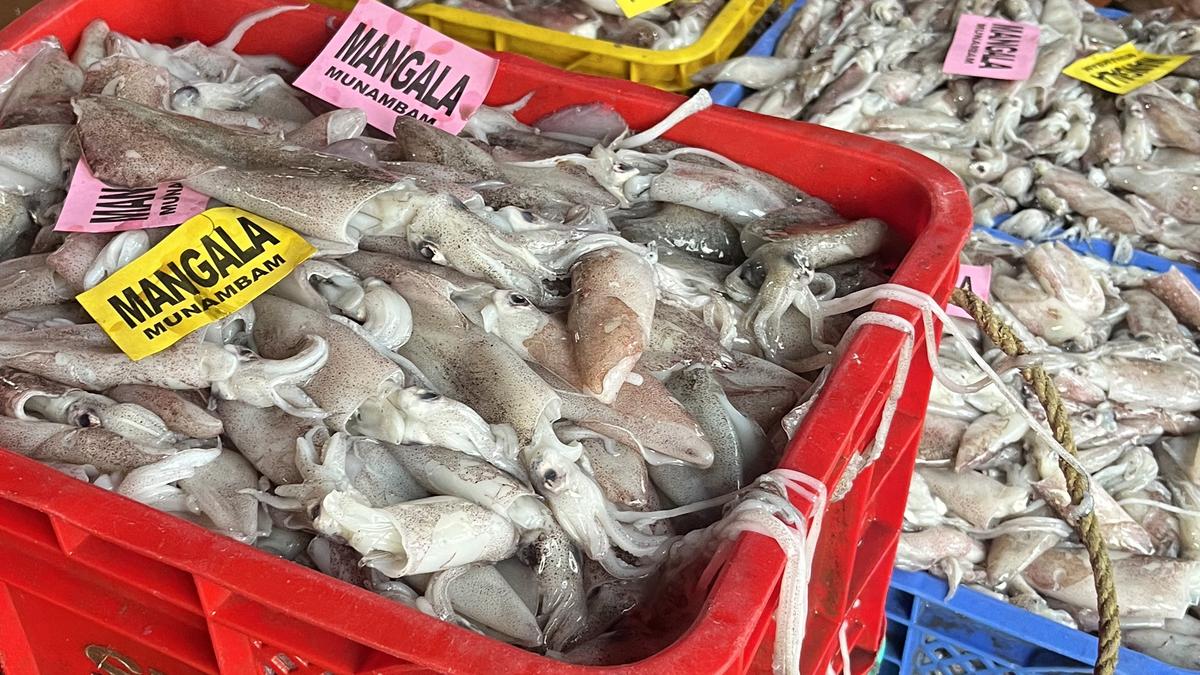
- 29 Jan 2025
In News:
Researchers at the Central Marine Fisheries Research Institute (CMFRI), Kochi, have successfully decoded the gene expression pattern of the Indian squid (Uroteuthis duvaucelii), marking a major scientific advancement with wide-ranging implications for neuroscience, environmental studies, and sustainable marine resource management.
About Indian Squid
- Common Name: Indian Calamari
- Scientific Classification: Cephalopod
- Size: Typically 20–30 cm; can grow up to 50 cm
- Appearance: Light pinkish-grey body with two large fins, eight arms, and two longer tentacles used for capturing prey
- Key Abilities:
- Camouflage
- Jet propulsion for rapid movement
- Advanced nervous system
- Problem-solving skills and behavioral intelligence
Habitat & Distribution
- Preferred Habitat: Coastal and open sea regions of the Indian Ocean
- Found at depths ranging from 100 to 500 meters, some even up to 1,500 meters
- Requires high dissolved oxygen levels for respiration
- Geographic Distribution:
- Widely distributed in the Indo-West Pacific
- Found in Indian Ocean, Red Sea, Arabian Sea, from Mozambique to the South China Sea, Philippine Sea, and northward to Taiwan
- Conservation Status: IUCN Red List: Least Concern
Scientific Significance of Genetic Research
- Key Findings:
- Revealed genetic similarities with higher vertebrates like fish and humans, suggesting deep evolutionary links
- Indicates that Indian squid could serve as a model organism to study brain evolution, intelligence, and neurobiological functions
- Potential to inform research in neural circuits, memory, learning, and even neurological diseases
- Findings may also explain squid's adaptive success, such as evading predators and fishing pressures due to high cognitive ability
Institutional Background: CMFRI
- Established: 1947
- Affiliation: Part of the Indian Council of Agricultural Research (ICAR) since 1967
- Headquarters: Kochi, Kerala
- Mandate: Research on sustainable marine fisheries and ecosystem conservation
CMFRI’s Broader Recommendations for Sustainable Marine Management
- Enactment of Sea Fishing Act to regulate fishing beyond territorial waters
- Institutionalization of ecological stock assessments for sustainable exploitation
- Simplification and promotion of open mariculture with focus on environmental sustainability
- Use of AI-based systems to estimate landings and monitor fishing vessels
- Deep-sea resource exploration and alternative fishing methods
- Institutional mechanism for supervising deep-sea fishing
- Strengthening insurance coverage for marine fishers
Sanjay Battlefield Surveillance System
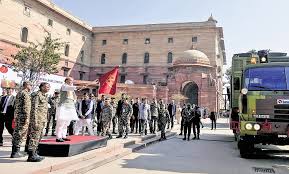
- 25 Jan 2025
In News:
Defence Minister Rajnath Singh recently flagged off Sanjay, an indigenously developed Battlefield Surveillance System (BSS), to be inducted into the Indian Army in phased manner from March to October 2025, designated as the ‘Year of Reforms’ by the Ministry of Defence.
Overview:
- Nature: Automated surveillance system
- Purpose: To integrate real-time data from ground and aerial sensors, enabling swift, informed decision-making in conventional and sub-conventional warfare scenarios.
Key Features:
- Common Surveillance Picture (CSP): Fuses verified sensor data to generate a real-time surveillance image of the battlefield.
- Real-time Integration & Analytics: Processes inputs using advanced analytics to eliminate duplication and enhance situational awareness.
- Secure Networks: Operates over the Indian Army’s Data Network and Satellite Communication Network, ensuring reliable and secure data flow.
- Centralized Web Application: Provides integrated inputs to Command Headquarters and Army HQ through a unified platform, supporting the Indian Army's Decision Support System.
- Indigenous Development: Jointly developed by the Indian Army and Bharat Electronics Limited (BEL) under the Buy (Indian) category, promoting Aatmanirbharta in defense.
Operational Significance:
- Enhances battlefield transparency, situational awareness, and surveillance capabilities along vast and sensitive land borders.
- Functions as a force multiplier in Intelligence, Surveillance & Reconnaissance (ISR) operations.
- Enables network-centric warfare, marking a shift towards data-driven military operations.
Deployment:
- To be inducted into all Brigades, Divisions, and Corps of the Army in three phases (March–October 2025).
Guillain-Barré Syndrome (GBS)
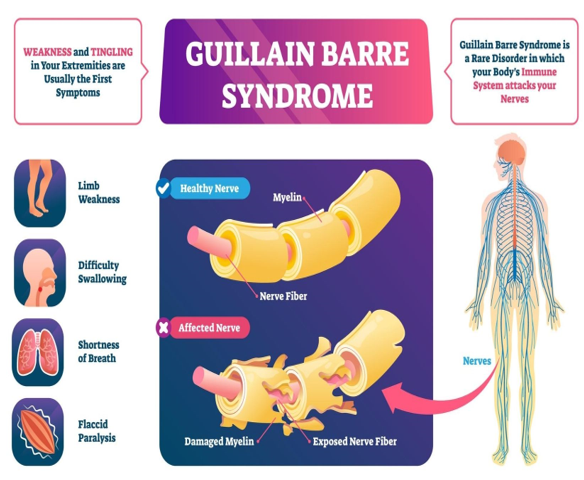
- 24 Jan 2025
In News:
The Pune Health Department has reported a surge in Guillain-Barré Syndrome (GBS) cases, prompting concern due to its severe neurological impact and association with prior infections or immune responses.
What is Guillain-Barré Syndrome?
- Nature of Disorder: A rare autoimmune condition where the body’s immune system attacks the peripheral nervous system, affecting voluntary muscle control and sensory signals (e.g., pain, temperature, and touch).
- Medical Term: Also known as Acute Inflammatory Demyelinating Polyradiculoneuropathy (AIDP).
- System Affected: Peripheral nerves, i.e., nerves outside the brain and spinal cord.
Epidemiology:
- Prevalence: Rare but potentially life-threatening.
- Age Group Affected: Can occur at any age but is most common between 30 to 50 years.
- Non-contagious: GBS is not transmitted from person to person.
Causes and Triggers:
- Exact Cause: Unknown, but usually follows an immune response to:
- Infections: Campylobacter jejuni (foodborne bacteria), Epstein-Barr Virus (EBV), Cytomegalovirus (CMV), respiratory or urinary tract infections.
- Vaccinations: Rarely observed post-immunisation.
- Surgery or trauma: Can act as physical stressors that trigger the syndrome.
Symptoms:
- Initial Signs: Tingling and weakness starting in the legs, progressing upwards.
- Progression:
- Weakness in arms, facial muscles.
- Difficulty walking or balancing.
- In severe cases, respiratory paralysis, requiring ventilator support.
- Onset: Can escalate within hours, days, or weeks.
- Range: Varies from mild muscle weakness to complete paralysis.
Impact:
- Neurological Disruption: Affects communication between the brain and muscles.
- Temporary but Debilitating: Most patients recover over weeks to months, though rehabilitation may be prolonged.
- Critical Care: May require intensive medical and respiratory support in acute stages.
Diagnosis & Treatment:
- No definitive cure, but early intervention improves outcomes.
- Main Treatments:
- Intravenous Immunoglobulin (IVIG):
- Contains healthy antibodies from donated blood.
- Helps suppress the immune attack on nerves.
- Plasmapheresis (Plasma Exchange): Filters harmful antibodies from the blood.
- Supportive Therapy:
- Mechanical ventilation in case of respiratory failure.
- Physiotherapy for muscle recovery and mobility.
Ad Hoc High Court Judges
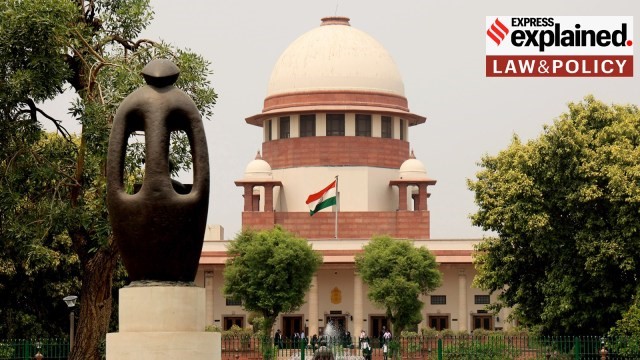
- 24 Jan 2025
In News:
To address the mounting pendency of criminal cases in several High Courts, the Supreme Court of India has suggested invoking Article 224A of the Constitution, which allows the appointment of retired High Court judges on an ad hoc basis.
Constitutional Provision: Article 224A
- Title: Appointment of Retired Judges at Sittings of High Courts.
- Key Provision: The Chief Justice of a High Court, with the consent of the President, may invite retired judges of the same or other High Courts to act as judges temporarily.
- Status: These judges enjoy the powers, jurisdiction, and privileges of regular High Court judges, but are not deemed permanent judges.
Why the Provision is Being Invoked Now:
- Backlog of Cases: Over 40% vacancy rate in High Courts; huge pendency, especially of criminal cases.
- Delays in Regular Appointments: Slow process of regular judicial appointments prompted the Supreme Court to consider alternative mechanisms.
- Underuse of Article 224A: Only three recorded instances of ad hoc appointments since Independence:
- Justice Suraj Bhan – MP High Court (1972)
- Justice P. Venugopal – Madras High Court (1982–83)
- Justice O.P. Srivastava – Allahabad High Court (2007, Ayodhya case)
Judicial Interpretation – Lok Prahari v. Union of India (2021):
- The Supreme Court laid down guidelines for invoking Article 224A.
- The process must be routed through the SC collegium (CJI + 2 senior-most judges).
- Trigger Point for Appointment:
- High Court vacancies exceed 20% of sanctioned strength (excluding pending proposals).
- More than 10% of pending cases are over 5 years old.
Procedure for Appointment:
- Consent: Retired judge must agree to serve again.
- Initiation: Chief Justice of the High Court forwards the name.
- State and Centre: Proposal routed through State CM → Union Law Ministry.
- SC Collegium: Must review and approve the name.
- Executive Clearance: Law Ministry → PM → President for final approval.
Term & Allowances:
- Duration: Typically 2–3 years, renewable if required.
- Number of Judges: Suggested 2–5 ad hoc judges per High Court.
- Remuneration: Entitled to allowances as per Presidential order.
- Status: Have full judicial powers during tenure.
Concerns & Safeguards:
- Fear of using ad hoc appointments as a substitute for regular appointments.
- Therefore, SC mandates that regular appointment process must be underway before invoking Article 224A.
- Periodic review and panel creation of eligible retired judges recommended.
M23 Armed Group
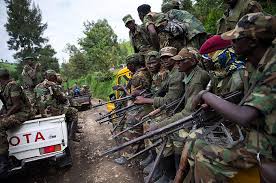
- 24 Jan 2025
In News:
The March 23 Movement (M23), a rebel group active in eastern Democratic Republic of Congo (DRC), has intensified its insurgency in North Kivu province, capturing key areas like Minova and threatening the provincial capital, Goma.
About M23 Armed Group:
- Full Form: March 23 Movement
- Formation: 2012, by mutineers from the Congolese army protesting a failed 2009 peace deal.
- Base of Operations: Eastern DRC, primarily in North Kivu province.
- Activities: Armed rebellion, territorial control, ethnic conflict, disruption of state authority.
External Support:
- Rwandan Involvement:
- UN Reports (2023): Estimated 3,000–4,000 Rwandan troops operating alongside M23.
- Rwanda alleged to have “de facto control” over M23 operations.
- Kigali denies direct territorial aggression claims.
- International Concerns: The group’s resurgence reflects broader regional instability and transnational military dynamics.
Recent Developments (2024):
- Territorial Gains: Capture of Minova; encroachment on Goma, a strategic and densely populated city.
- Humanitarian Crisis:
- Over 2,30,000 displaced since January 2024.
- Influx of injured civilians in hospitals; risk of further displacement and violence.
- Congolese Military Weakness:
- Internal instability and operational setbacks have contributed to M23’s advances.
- The Congolese army acknowledged a “breakthrough” by M23 with external backing.
Geographical Significance of the Region:
- DRC Capital: Kinshasa
- Strategic Location: Borders 9 countries—Angola, Zambia, Tanzania, Burundi, Rwanda, Uganda, South Sudan, Central African Republic, Republic of Congo.
- Topography:
- Rwenzori & Virunga Mountains: Includes active volcanoes (e.g., Mount Nyiragongo).
- Congo River: Vital for transport, hydroelectric power, and biodiversity.
- Natural Resources:
- Rich in cobalt, coltan, gold, and other rare minerals—critical to the global tech industry.
- The mineral wealth of North Kivu is a major driver of prolonged conflict.
Is Poverty Being Underestimated in India?
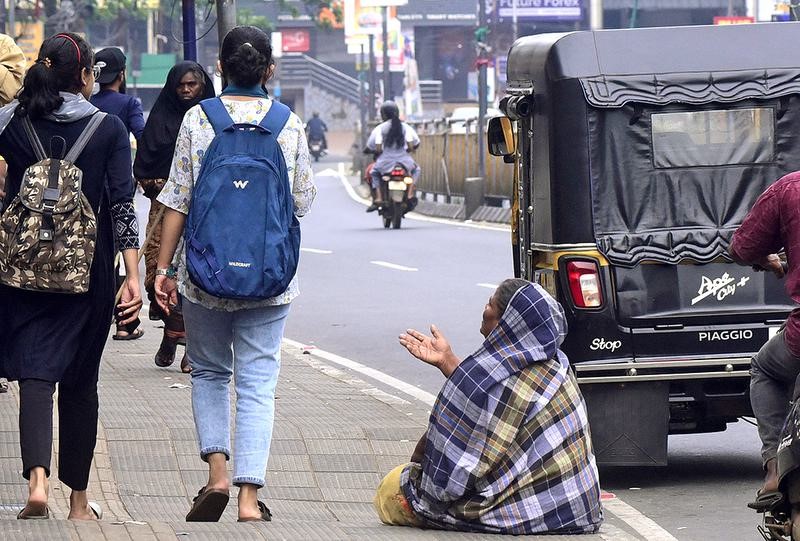
- 24 Jan 2025
In News:
The recent 2023-24 Household Consumption Expenditure Survey (HCES) showed a decline in poverty across rural and urban India. However, questions have emerged about whether poverty is being underestimated, due to changes in methodologies, definitions, and data availability.
Evolution of Poverty Measurement in India
- 1970s to 2005: Poverty was defined based on minimum calorie intake; updated every 5 years using NSSO data.
- Tendulkar Committee introduced in response to divergence between NSSO and National Accounts data.
- Post-2011-12: No official poverty estimates or surveys; alternative indices like Multidimensional Poverty Index (MPI) were used.
Current Data Issues
- Different recall periods in surveys (7-day, 30-day, 365-day) create non-comparability.
- Modified Mixed Recall Period (MMRP) introduced in 2017-18 and improved upon in recent years with three household visits, enhancing recall and thus raising reported expenditures.
- Result: Using older poverty lines on newer, higher expenditure data underestimates poverty.
Diverging Poverty Estimates
- Dr. C. Rangarajan (2022-23): Estimated poverty at around 10%.
- Recent factsheet (2023-24) suggests poverty may have declined to single digits.
- A paper using Rangarajan’s methodology on 2022-23 HCES data estimated 25% poverty, but this is debated.
Reasons for Poverty Reduction
- High GDP growth, increased public expenditure, and improved public delivery systems.
- National Food Security Act covers nearly 80 crore people.
- Broadened definition of poverty now includes non-food items and essential services.
- Decline in poverty estimated around 17-18% between 2011-12 and 2023-24.
Rural-Urban Trends
- Consumption gap between rural and urban areas is narrowing.
- Rural consumption patterns becoming more urban-like.
- 2011 Census definitions outdated — many rural areas are peri-urban in character.
Need for Poverty Line Revision
- Lack of consensus and official backing on methodology hinders creation of a new poverty line suited to current data.
- UNDP’s global poverty line is $2.15/day; India’s poverty was 12.9% in 2019 by that metric.
- NITI Aayog’s estimates do not support 25% poverty claim.
Debate on Multidimensional Poverty Index
- India’s MPI (12 indicators) differs from UNDP’s 10-indicator framework.
- Additions like bank accounts and maternal health are India-specific.
- Criticism: Once indicators (e.g., electricity, bank accounts) are met, they remain met — poverty appears to decline permanently, while income vulnerability is not captured.
10 years of Beti Bachao Beti Padhao (BBBP)
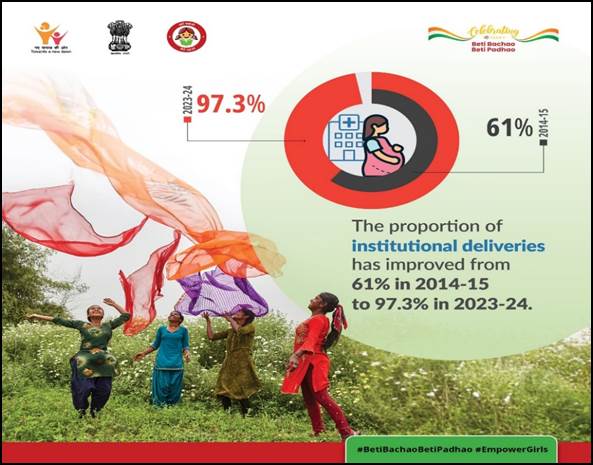
- 23 Jan 2025
In News:
Launched on 22nd January 2015 in Panipat, Haryana, BBBP was initiated in response to the declining Child Sex Ratio (CSR), which stood at 918 girls per 1000 boys (Census 2011). It marked a key step towards gender equality, aiming to curb gender-biased sex-selective elimination and improve the status of the girl child.
Key Highlights:
Core Objectives
- Improve Sex Ratio at Birth (SRB) by two points annually.
- Sustain institutional delivery rate at ≥95%.
- Increase 1st trimester ANC registration and girls' enrollment in secondary education by 1% annually.
- Reduce dropout rates among girls.
- Promote safe menstrual hygiene management (MHM).
Target Groups
- Primary: Young couples, expecting parents, adolescents, households, communities.
- Secondary: Schools, AWCs, health professionals, PRIs, ULBs, NGOs, SHGs, media, and religious leaders.
Implementation Structure
- Type: Centrally Sponsored Scheme (CSS) with 100% Central funding.
- Ministries Involved:
- Women and Child Development
- Health and Family Welfare
- Education
- Financial Assistance (Per District/Year):
- Rs. 40 lakh (SRB ≤918)
- Rs. 30 lakh (SRB 919–952)
- Rs. 20 lakh (SRB >952)
Integration with Mission Shakti (2021–2026)
BBBP now functions under Mission Shakti, which comprises two verticals:
- Sambal (Safety & Security):
- One Stop Centres (OSCs)
- Women Helpline (181)
- Nari Adalat: Alternative dispute resolution
- Samarthya (Empowerment):
- Sakhi Niwas, Palna Creches
- Shakti Sadans (rehabilitation)
- PM Matru Vandana Yojana: Extended support for a second girl child
- SANKALP-HEW: District-level single-window system for all women-centric schemes
Achievements in 10 Years (2015–2025)
- SRB: Improved from 918 (2014-15) to 930 (2023-24)
- Girls’ GER: Rose from 75.5% (2014-15) to 78% (2023-24) in secondary education
- Institutional Deliveries: Increased from 61% to 97.3%
- Kanya Shiksha Pravesh Utsav: Re-enrolled over 1 lakh out-of-school girls
- Economic Empowerment: Integration with skilling initiatives and 70% of PM Mudra loans disbursed to women
- Awareness Campaigns:
- Selfie with Daughter
- Beti Janmotsav
- Yashaswini Bike Expedition
- "Betiyan Bane Kushal" Skill Conference
Sukanya Samriddhi Yojana (SSY) – A Financial Tool for Empowerment
Launched under BBBP, SSY is a small savings scheme to ensure the financial security of girl children.
Key Features
- Eligibility: Indian girl child below 10 years.
- Account: Max 2 per family (exceptions for twins/triplets).
- Deposit Limit: ?250 to ?1.5 lakh/year (15 years).
- Tenure: Account matures 21 years after opening.
- Withdrawals: Up to 50% for higher education after 18 years.
- Tax Benefits: Exempt under Section 80C (EEE status).
Impact
- Over 4.1 crore accounts opened by Nov 2024.
- Promotes long-term savings and financial inclusion.
- Complements BBBP by addressing economic empowerment of girls.
Mission Vatsalya
- Formerly ICPS (2009), then Child Protection Services (2017).
- Merged into Mission Vatsalya in 2021.
- Focuses on:
- Juvenile justice
- Child protection
- Advocacy and rehabilitation
- Ensures “no child is left behind” principle aligned with SDGs.
Pradhan Mantri Matru Vandana Yojana (PMMVY)
- Supports pregnant and lactating mothers:
- ?5,000 in 3 installments + ?1,000 (JSY)
- Now extended to second girl child to promote gender equity.
Targets wage compensation, safe delivery, maternal nutrition, and reduced MMR/IMR.
Nigeria admitted as BRICS Partner Country
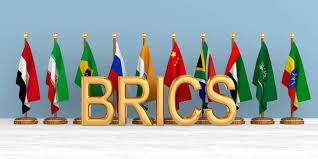
- 19 Jan 2025
In News:
- Nigeria has been admitted as the 9th "Partner Country" of the BRICS grouping under Brazil’s presidency in 2025.
- Other BRICS partner countries include Belarus, Bolivia, Cuba, Kazakhstan, Malaysia, Thailand, Uganda, and Uzbekistan.
- A "partner country" in BRICS is allowed to attend summits, ministerial meetings, and participate in joint initiatives, but does not have formal membership or decision-making power.
About Nigeria’s Role
- Nigeria has the 6th largest population globally and the largest in Africa.
- It is the 4th largest economy in Africa, often termed the "Giant of Africa".
- Nigeria plays a significant role in South-South cooperation and reform of global governance structures, aligning with BRICS' strategic objectives.
About BRICS
- Founded: 2009 by Brazil, Russia, India, and China; South Africa joined in 2010.
- New Full Members (as of 2023): Iran, Egypt, Ethiopia, UAE, and Indonesia (effective Jan 2025).
- Membership Invitations: Saudi Arabia has been invited but not yet accepted.
- Applicants: Turkey, Azerbaijan, Malaysia have formally applied.
- Three Pillars of Cooperation:
- Political and Security
- Economic and Financial
- Cultural and People-to-People Exchanges
- Represents ~40% of global population and ~37.3% of global GDP.
India has hosted BRICS Summits in 2012 (4th), 2016 (8th), and 2021 (13th).
Rupee Depreciation
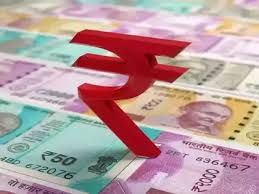
- 18 Jan 2025
In News:
The Indian rupee has recently experienced sharp devaluation against the US dollar after a period of relative stability. This shift is attributed to several factors, including capital outflows, rising import costs, and RBI’s evolving policy stance.
Understanding Exchange Rate Regimes
Exchange rates are classified into:
- Fixed Exchange Rate: The central bank maintains a constant exchange rate by actively managing reserves.
- Floating Exchange Rate: Market-driven rates with minimal intervention.
- Managed-Floating Exchange Rate: A blend of market forces and central bank intervention.
India has largely pursued a managed-floating exchange rate regime. The RBI has historically responded to excess demand by depreciating the rupee while selling forex reserves and, under excess supply conditions, resisted rupee appreciation to maintain export competitiveness.
Post-COVID Exchange Rate Shift
Between 2022 and November 2024, the RBI temporarily adopted a strategy resembling a fixed exchange rate regime to stabilize the rupee. However, amid rising capital outflows and increased import costs, the RBI recently reverted to its managed-float approach, allowing the rupee to depreciate.
Causes of Rupee Depreciation
- Internal Factors:
- Rising inflation reduced the rupee's real value and increased production costs.
- A widening trade deficit due to higher crude oil imports heightened demand for foreign currency.
- Persistent fiscal imbalances further pressured the rupee.
- Policy ambiguity in the RBI’s stance added market uncertainty.
- External Factors:
- Capital outflows driven by global uncertainties and rising US interest rates.
- Geopolitical tensions (e.g., Russia-Ukraine war) increased India’s import bill.
- The US dollar's strength amid aggressive Federal Reserve rate hikes further weakened the rupee.
Implications of Rupee Devaluation
- Positive Effects:
- Boost to Exports: A weaker rupee makes Indian goods cheaper, enhancing export competitiveness if supported by real exchange rate depreciation.
- Adverse Effects:
- Inflationary Pressures: Higher import costs increase consumer prices.
- Reduced Purchasing Power: Increased costs are often passed on to consumers.
- Foreign Debt Servicing: A depreciated rupee raises debt repayment costs for Indian firms and the government.
- Investor Sentiment: Currency instability diminishes foreign investor confidence, triggering further capital outflows.
Structural Constraints in the Indian Economy
- Divergence between NEER and REER:
- Since the mid-2010s, India's Nominal Effective Exchange Rate (NEER) depreciated while the Real Effective Exchange Rate (REER) appreciated. This divergence undermines export competitiveness, as rising domestic prices offset nominal depreciation benefits.
- Rising Markups:
- Non-financial firms increased their markups on variable costs, contributing to inflation and nullifying the advantages of currency depreciation for exports.
Policy Responses and Recommendations
- RBI Interventions:
- Forex market interventions to manage demand-supply imbalances.
- Interest rate adjustments to attract capital inflows and stabilize the rupee.
- Enhanced forex reserve management to mitigate excessive volatility.
- Fiscal Strategies:
- Reducing Import Dependency: Boost domestic production of high-demand goods like crude oil substitutes.
- Export Incentives: Strengthen export sectors through subsidies, incentives, and improved infrastructure.
- Encouraging Long-Term FDI: Promoting stable investment environments for sustained capital inflows.
- Structural Reforms:
- Policies that enhance domestic production, reduce reliance on volatile foreign portfolio investments (FPIs), and maximize remittances can stabilize the rupee in the long term.
Miyawaki Technique
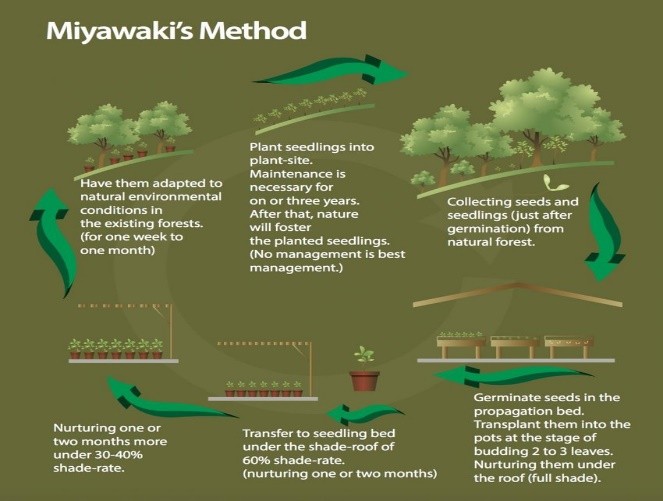
- 09 Jan 2025
In News:
- Prayagraj Municipal Corporation has successfully transformed over 56,000 square meters of garbage dumps and barren lands into lush green forests using the Miyawaki Technique over the past two years, as part of environmental conservation efforts in preparation for Mahakumbh 2025.
About Miyawaki Technique:
- Origin: Developed by Akira Miyawaki, a Japanese botanist, in the 1970s to create dense and fast-growing forests.
- Key Features:
- Dense Planting: Trees and shrubs are planted close together, often using native species.
- Accelerated Growth: Trees grow 10 times faster than in traditional forests.
- Soil Restoration: Improves soil fertility and promotes natural regeneration.
- Biodiversity Boost: Supports a variety of flora and fauna by mimicking natural ecosystems.
- Significance:
- Urban Reforestation: Converts barren or polluted lands into green spaces.
- Environmental Benefits:
- Reduces air and water pollution.
- Absorbs carbon and helps combat climate change.
- Lowers temperatures by 4-7°C.
- Sustainability: Prevents soil erosion and promotes long-term ecological balance.
Miyawaki Forests in Prayagraj:
- Achievements:
- Over 56,000 square meters of land converted into dense forests using the Miyawaki technique over the last two years.
- The project aims to create oxygen banks in preparation for the Mahakumbh 2025 and enhance air quality for millions of expected visitors.
- Plantations:
- 55,800 square meters of area developed across 10+ locations in Prayagraj.
- Largest plantation: 1.2 lakh trees in Naini industrial area.
- 27,000 trees planted in Baswar after cleaning the city's largest garbage dump.
- Environmental Impact:
- The plantations are helping to reduce dust, dirt, and foul odors, thus improving air quality.
- Temperature regulation: The dense forests can lower temperatures by 4 to 7 degrees Celsius.
- Biodiversity and Soil Fertility: Accelerated growth of trees boosts biodiversity and improves soil fertility.
- Tree Species Planted:
- Mango, Mahua, Neem, Peepal, Tamarind, Arjuna, Teak, Amla.
- Ornamental and medicinal plants like Hibiscus, Kadamba, Gulmohar, etc.
- Other species include Sheesham, Bamboo, Lemon, Drumstick (Sahjan), and Tecoma.
Benefits of Miyawaki Forests:
- Air and Water Pollution Reduction: Trees absorb carbon, purify air, and improve water quality.
- Temperature Control: The forests help in reducing urban heat islands, lowering the temperature during hot months.
- Soil Conservation: The dense forests prevent soil erosion and promote the regeneration of the natural ecosystem.
- Enhanced Biodiversity: The technique supports a rich variety of species, improving ecological balance.
India-Australia Economic Cooperation and Trade Agreement (Ind-Aus ECTA)
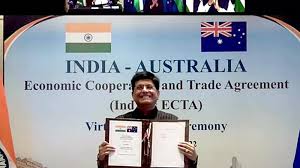
- 31 Dec 2024
In News:
The India-Australia Economic Cooperation and Trade Agreement (Ind-Aus ECTA) completes two years of remarkable success, driving mutual growth and showcasing the complementarity of both economies.
Key Achievements:
- Bilateral Merchandise Trade Surge:
- Trade increased from USD 12.2 billion (2020-21) to USD 26 billion (2022-23).
- Trade moderated slightly in 2023-24 to USD 24 billion, but exports from India to Australia grew by 14%.
- From April-November 2024, bilateral trade reached USD 16.3 billion.
- Preferential Import Utilization:
- Export utilization: 79%
- Import utilization: 84%
- Sectoral Growth:
- Textiles, chemicals, and agriculture sectors have seen significant growth.
- New export products: Gold studded with diamonds, turbojets.
- India’s imports: Metalliferous ores, cotton, wood products that fuel Indian industries.
- Geopolitical Strengthening:
- Enhanced relations in forums like Quad, Indo-Pacific Economic Framework (IPEF), Supply Chain Resilience Initiative (SCRI).
Key Features of the Agreement:
- Tariff Reductions:
- Australian goods: 85% tariff-free access to India (rising to 90% by 2026).
- Indian goods: 96% tariff-free access to Australia (rising to 100% by 2026).
- Access to Key Markets:
- India: Access to Australia's fast-growing market.
- Australia: Access to India's labor-intensive sectors like gems, jewelry, textiles, leather, furniture, food, agriculture.
- Services and IT:
- 135 sub-sectors covered in services.
- India gains market access in 103 sub-sectors with Most Favoured Nation (MFN) status in 31.
- Fast-tracked approval of medicines and elimination of double taxation for India's IT sector.
- Job Creation & Skill Exchange:
- Expected creation of 1 million jobs in India.
- Opportunities for Indian yoga teachers, chefs, and 100,000 students with post-study work visas.
Future Prospects:
- Comprehensive Economic Cooperation Agreement (CECA): Builds on ECTA to advance bilateral trade, with 10 formal rounds and ongoing inter-sessional discussions.
- Trade Target: Aim to reach AUD 100 billion in trade by 2030.
- Global Economic Impact: Strengthening the partnership will contribute to a more resilient and dynamic global economy, with deeper economic integration between India and Australia.
Space Docking Experiment (SpaDeX) Mission
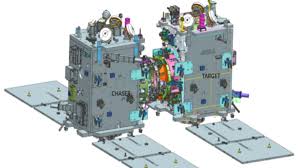
- 24 Dec 2024
In News:
The Indian Space Research Organisation (ISRO) is set to launch its Space Docking Experiment (SpaDeX) mission, a key milestone in India’s space capabilities. The mission will deploy two 220-kg satellites, SDX01 (Chaser) and SDX02 (Target), into a 740 km orbit using the PSLV-C60 rocket. SpaDeX aims to demonstrate the technology for satellite docking, a critical component for future space missions such as lunar exploration and the development of India's own space station, Bharatiya Antariksh Station (BAS).
Key Objectives of SpaDeX Mission:
- Primary Objective: To demonstrate the rendezvous, docking, and undocking of two small spacecraft (SDX01 and SDX02) autonomously.
- Secondary Objectives: Include testing electric power transfer between the docked spacecraft, composite spacecraft control, and post-docking payload operations.
The mission will see the two spacecraft gradually approach each other, performing a series of maneuvers, starting at a 20 km distance and closing to millimeter-scale distances before docking. Once docked, they will execute secondary tasks, such as scientific payload operations, using advanced technologies including high-resolution cameras, multi-spectral payloads, and radiation monitors.
Technological Innovations:
- Docking Mechanism: An indigenous, motor-driven, low-impact, androgynous docking system with capture, extension/retraction, and rigidization mechanisms. Both spacecraft are equipped with identical docking systems to simplify operations.
- Advanced Sensors: The spacecraft will use a Laser Range Finder (LRF), Proximity & Docking Sensors (PDS), and Rendezvous Sensors for precise distance measurement and to guide the docking process.
- Inter-Satellite Communication: The spacecraft will employ autonomous inter-satellite links (ISL) for real-time communication and data sharing.
- RODP Processor: This system, based on GNSS, ensures accurate position and velocity determination for the spacecraft during the docking procedure.
Significance of the SpaDeX Mission:
- Technological Milestone: SpaDeX positions India as the fourth country, after the US, Russia, and China, to develop space docking technology.
- Space Exploration: The successful demonstration will facilitate future space exploration, including Chandrayaan-4 and interplanetary missions.
- Modular Space Infrastructure: Space docking is essential for building multi-modular space stations, which allows the construction of large structures in space and enhances flexibility for future missions.
- Satellite Servicing: Docking enables satellite servicing, including repairs, refueling, and upgrades, which increases the operational lifespan of satellites.
SpaDeX Mission for India’s Space Station:
The SpaDeX mission is a crucial step towards India’s plans for the Bharatiya Antariksh Station (BAS). This will be India’s first modular space station, designed to conduct advanced scientific research, including in life sciences and medicine. BAS is expected to begin operations by 2035, and the development of docking technology is pivotal for its assembly and operation.
Mission Launch Details:
The PSLV-C60 rocket is set to launch the SpaDeX mission from Sriharikota. The mission is a demonstration of India's growing space capabilities and its indigenous technologies, including the Bharatiya Docking System (BDS).
Challenges and Technological Requirements:
The docking process requires extremely precise maneuvering, as the two spacecraft will be traveling at speeds of 28,800 km/h and must reduce their relative velocity to just 0.036 km/h before docking. This level of precision is crucial for future missions involving spacecraft servicing, crew transfers, and the construction of space infrastructure like BAS.
In addition to the docking demonstration, SpaDeX will carry 24 academic and startup payloads aboard the PSLV’s fourth stage, POEM (PSLV Orbital Experimental Module-4), offering a valuable platform for microgravity research.
Future Prospects:
The success of SpaDeX will pave the way for more complex missions, such as India’s lunar and Mars exploration programs, the development of the Bharatiya Antariksh Station, and international collaborations in satellite servicing and space infrastructure.
Green fixed deposits

- 23 Dec 2024
In News:
Green fixed deposits (FDs) are a type of investment scheme offered by banks and financial companies, aimed at environmentally-conscious investors. They function similarly to traditional fixed deposits, where funds are locked in with a bank for a fixed tenure. The primary distinction between green and regular deposits lies in the allocation of funds. While regular deposits are pooled into a common fund, the funds from green deposits are exclusively allocated to projects that promote environmental sustainability.
Key Features of Green Fixed Deposits:
- Investment Purpose: The funds raised through green FDs are directed towards environmentally beneficial projects, such as renewable energy initiatives (solar and wind power), clean technology, organic farming, and energy-efficient infrastructure.
- Eligibility: Green deposits are available to various entities, including individuals, Hindu Undivided Families (HUFs), societies, clubs, non-profit organizations, and sole proprietorships.
- Interest Rates: The interest rates on green deposits may or may not differ from regular deposits, depending on the policies set by the lending institution. Some banks and financial institutions, like IndusInd Bank, Federal Bank, DBS Bank India, and HDFC Ltd., offer green deposits, with Bank of Baroda recently launching the BOB Earth Green Term Deposit with an interest rate of up to 7.15% per annum.
- Safety: Like regular fixed deposits, green deposits are insured by the Deposit Insurance and Credit Guarantee Corporation (DICGC) under the provisions of the DICGC Act, 1961, ensuring the safety of the investment.
- Overdraft Facility: Banks may offer overdraft facilities against green deposits, providing more flexibility to investors.
- Premature Withdrawal: If the investor chooses to withdraw the deposit before the agreed tenure (after six months), the green FD will be converted into a regular fixed deposit.
- Denomination: Green deposits are denominated in Indian Rupees only.
India’s National Quantum Mission
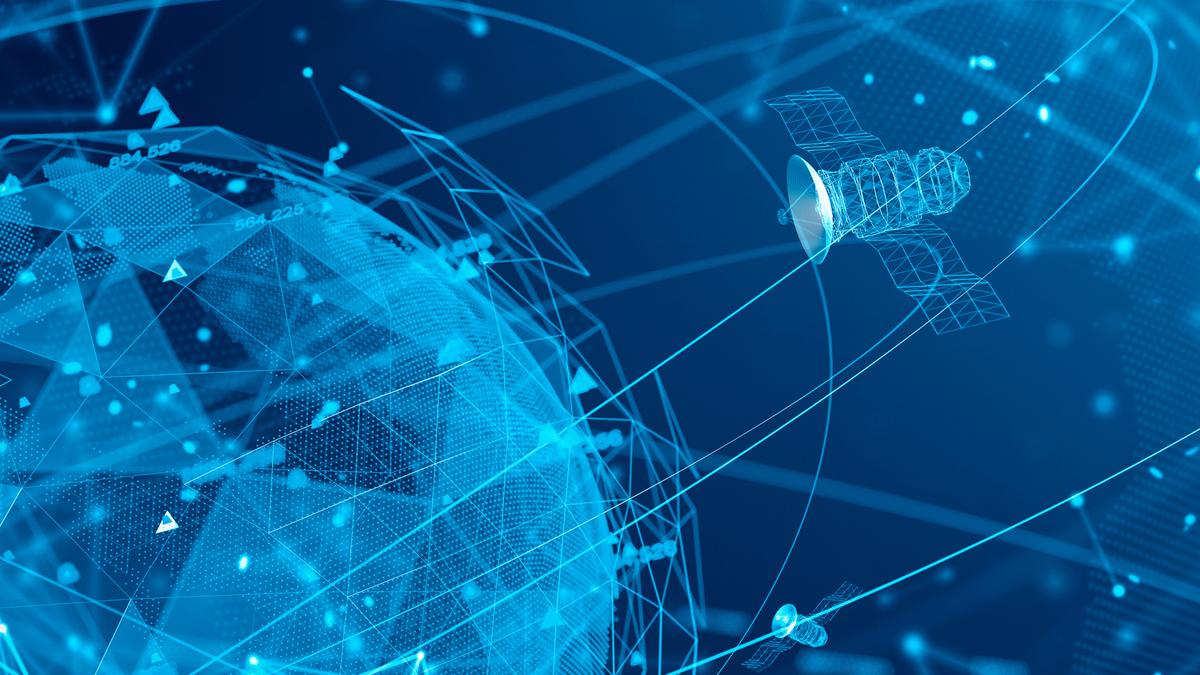
- 22 Dec 2024
In News:
India is preparing to launch its first quantum satellite within 2-3 years as part of its National Quantum Mission (NQM), a significant initiative aimed at positioning India as a global leader in quantum technologies. This satellite will play a pivotal role in enhancing the security of communications, particularly in the face of the potential threat posed by quantum computers to existing cryptographic systems.
What is a Quantum Satellite?
A quantum satellite is a type of communication satellite that uses quantum physics principles to secure data transmission. Unlike conventional satellites that rely on classical encryption, quantum satellites leverage quantum mechanics to achieve unbreakable encryption through Quantum Key Distribution (QKD).
Key Features:
- Quantum Key Distribution (QKD): Ensures secure key sharing, revealing any attempts of eavesdropping.
- Security Advantage: Provides "unconditional security" by detecting any interference during the transmission process.
- Data Transmission: Unlike conventional satellites that encode data in classical bits, quantum satellites encode information in quantum states or qubits.
What is Quantum Cryptography?
Quantum cryptography is a technique that uses the laws of quantum mechanics to secure communications. The most widely used method is Quantum Key Distribution (QKD), which ensures that the keys used to encrypt and decrypt messages remain secret and unbreakable.
Key Mechanisms:
- Quantum Measurement: Any attempt to measure the quantum state (such as a photon carrying information) changes its state, alerting the sender and receiver to potential eavesdropping.
- Quantum Entanglement: When two quantum particles (photons) are entangled, a change in one will instantaneously affect the other, ensuring that the key remains secure.
Why is Quantum Satellite Important?
The advent of quantum computing threatens the cryptographic methods that secure current digital communications. Quantum computers, with their vast computational power, could potentially crack encryption codes that are currently deemed secure. Quantum satellites aim to counteract this threat by using quantum cryptography to make communications tamper-proof.
Security in the Quantum Era:
- Classical Encryption: Relies on mathematical problems that are difficult to solve without the decryption key.
- Quantum Encryption: Uses quantum properties, such as superposition and entanglement, to offer superior security.
National Quantum Mission (NQM)
The National Quantum Mission (NQM) was approved by the Union Cabinet in April 2023 with a budget of ?6,000 crore for implementation over eight years (2023-2031). The mission aims to accelerate the development and application of quantum technologies, with a focus on quantum communication, quantum computing, quantum sensing, and quantum metrology.
Key Objectives:
- Development of Quantum Computers: Building intermediate-scale quantum computers with 50-1000 qubits.
- Quantum Communication: Establishing secure, satellite-based quantum communication systems within India and internationally.
- Research and Innovation: Fostering quantum technologies and creating a self-reliant ecosystem.
India’s Advancements in Quantum Technology
India is making significant progress in quantum research and communication. The Raman Research Institute in Bengaluru has identified Hanle, Ladakh as an ideal location for quantum communication experiments due to its optimal atmospheric conditions.
The Indian Space Research Organisation (ISRO) has already demonstrated successful free-space quantum communication over short distances (300 meters). The upcoming quantum satellite will build upon this progress to create secure quantum communication networks within India and internationally.
Global Context: Micius Satellite and China’s Lead
China is a global leader in quantum communications, having launched the world’s first quantum satellite, Micius, in 2016. Micius demonstrated the feasibility of secure quantum communication by generating pairs of entangled photons. India’s quantum satellite will build on this technology to create robust, long-range quantum communication networks.
Limitations of Quantum Key Distribution (QKD)
Despite its promise, QKD faces several limitations:
- Technological Maturity: The technology is still in the experimental phase, and large-scale commercial implementation is not yet feasible.
- Authentication Issues: QKD lacks reliable methods to authenticate the transmission source, leaving it vulnerable to impersonation attacks.
- Infrastructure Costs: Establishing and maintaining QKD networks requires specialized hardware, leading to higher costs.
- Denial-of-Service Risks: Eavesdroppers can trigger the abort mechanism, leading to transmission interruptions.
- Signal Loss: Atmospheric and distance-related attenuation can degrade the quality of quantum signals.
National Quantum Mission and Sectoral Impact
The NQM aligns with India's national priorities, including Digital India, Make in India, and Start-up India. The mission’s outcomes are expected to impact various sectors, such as:
- Healthcare: Quantum computing for drug design and medical research.
- Space Exploration: Enhancing communication security for space missions.
- Banking and Financial Services: Strengthening data security and transaction integrity.
- Energy: Improving energy systems and smart grids through advanced sensing technologies.
Strengthening Multimodal and Integrated Logistics Ecosystem (SMILE) program
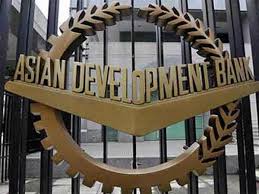
- 21 Dec 2024
On December 20, 2024, the Government of India and the Asian Development Bank (ADB) signed a $350 million policy-based loan aimed at expanding India's manufacturing sector and improving the resilience of its supply chains. This loan is part of the Strengthening Multimodal and Integrated Logistics Ecosystem (SMILE) program.
Key Points:
- Loan Agreement Signatories:
- Department of Economic Affairs (DEA), Ministry of Finance, Government of India
- Department for Promotion of Industry and Internal Trade (DPIIT), Ministry of Commerce and Industry
- Asian Development Bank (ADB)
- SMILE Program:
- Goal: Strengthen the logistics ecosystem to enhance India's manufacturing sector and improve supply chain resilience.
- Structure: The program includes two subprograms focusing on strategic reforms in logistics and infrastructure development.
- Key Features of the SMILE Program:
- Strengthening Multimodal Infrastructure: Enhances logistics infrastructure at the national, state, and city levels.
- Standardization: Improves warehousing and other logistics assets to attract private sector investment.
- External Trade Logistics: Enhances efficiencies in external trade logistics.
- Smart Systems: Adopts systems for efficient, low-emission logistics to promote sustainability.
- Expected Outcomes:
- Cost Reduction & Efficiency: Strategic reforms will reduce logistics costs and improve efficiency.
- Job Creation: Infrastructure development and reforms are expected to generate substantial employment opportunities.
- Gender Inclusion: The program promotes gender inclusion through economic growth initiatives.
- Impact on India’s Economy:
- The transformation of India’s logistics sector will enhance the competitiveness of the manufacturing sector and drive sustainable economic growth.
About the Asian Development Bank (ADB):
- Headquarters: Mandaluyong, Metro Manila, Philippines.
- Established: December 19, 1966.
- Members: 69 countries, including both regional (e.g., India, China) and non-regional (e.g., USA, Japan) members.
- Function: ADB promotes social and economic development in Asia and the Pacific, providing loans, grants, and technical assistance for development projects.
- Key Shareholders:
- Japan: 15.57%
- USA: 15.57%
- India: 6.32%
- China: 6.43%
- Australia: 5.77%
Eastern Maritime Corridor (EMC)
- 19 Dec 2024
In News:
In mid-2024, India surpassed China as the largest importer of Russian oil. This milestone has been accompanied by the operationalization of a new maritime route, the Eastern Maritime Corridor (EMC), which connects Chennai in India to Vladivostok in Russia. The new sea route is significantly reducing both shipping times and costs, facilitating smoother commodity trade between the two countries, particularly crude oil shipments.
The Eastern Maritime Corridor (EMC)
The EMC, covering a distance of about 5,600 nautical miles, has reduced the shipping time between India and Russia’s Far East by up to 16 days. The Chennai-Vladivostok route now takes just 24 days, compared to over 40 days using the traditional St. Petersburg-Mumbai route. This reduction in transit time makes it a highly efficient route for transporting goods such as crude oil, coal, LNG, fertilizers, and other commodities. Additionally, this new corridor supports India’s maritime sector and aligns with the country’s broader vision for maritime growth and regional strategic engagement.
Key Features of the EMC:
- Efficiency and Cost Savings: The route cuts shipping time and distance, reducing costs associated with longer transit periods. For example, a ship traveling between Vladivostok and Chennai now takes only about 12 days at cruising speed, compared to the traditional route's 40+ days.
- Strategic Importance: Vladivostok is Russia’s largest Pacific port, and the corridor strengthens India's strategic presence in the region. This maritime route bypasses traditional chokepoints like the Suez Canal, offering faster, more direct access to key markets.
- Diversification of Trade: Besides crude oil, the EMC facilitates the transportation of coal, LNG, fertilizers, and metals, diversifying India's trade portfolio with Russia. It also helps maintain supply chains for essential goods.
- Boosting India’s Maritime Sector: The corridor supports India’s Maritime Vision 2030, which aims to enhance the efficiency and reach of India's maritime trade, a sector responsible for over 70% of the country’s trade value.
Economic and Strategic Impact:
- The new Eastern Maritime Corridor is particularly significant for India’s energy needs. As the world’s third-largest consumer of crude oil, India imports over 85% of its crude oil demand. The growing imports of Russian crude, especially the Urals grade, are crucial for securing India’s energy future. Additionally, Russia’s competitive pricing on crude, coupled with the savings on shipping costs through the EMC, makes Russian oil even more attractive.
- Beyond the economic benefits, the EMC also supports India’s broader strategic goals, including strengthening ties with Russia, a key partner in defense, nuclear cooperation, and regional geopolitics. The closer maritime links also help counterbalance China's growing dominance in the Pacific region, aligning with India's Act Far East Policy and enhancing trade and diplomatic engagement with East Asia and Russia.
Other Key Maritime Corridors Relevant to India:
- International North-South Transport Corridor (INSTC): A 7,200 km multimodal route linking the Indian Ocean with Russia, offering alternative trade routes to Europe and Central Asia.
- India-Middle East-Europe Economic Corridor (IMEC): A recent project announced at the G20 Summit, which connects India, the Middle East, and Europe via rail, road, and maritime links, fostering greater regional integration.
- Northern Sea Route (NSR): A 5,600 km Arctic route offering shorter transit times between the Barents and Kara Seas and the Bering Strait, gaining importance due to growing imports of Russian energy resources.
In conclusion, the Eastern Maritime Corridor is reshaping India-Russia trade dynamics, boosting economic ties and strategic cooperation between the two nations. By facilitating faster and cheaper transportation, the EMC is not only beneficial for trade in crude oil but also for a range of other commodities, positioning India as a key player in the evolving global trade network.
Kisan Kavach
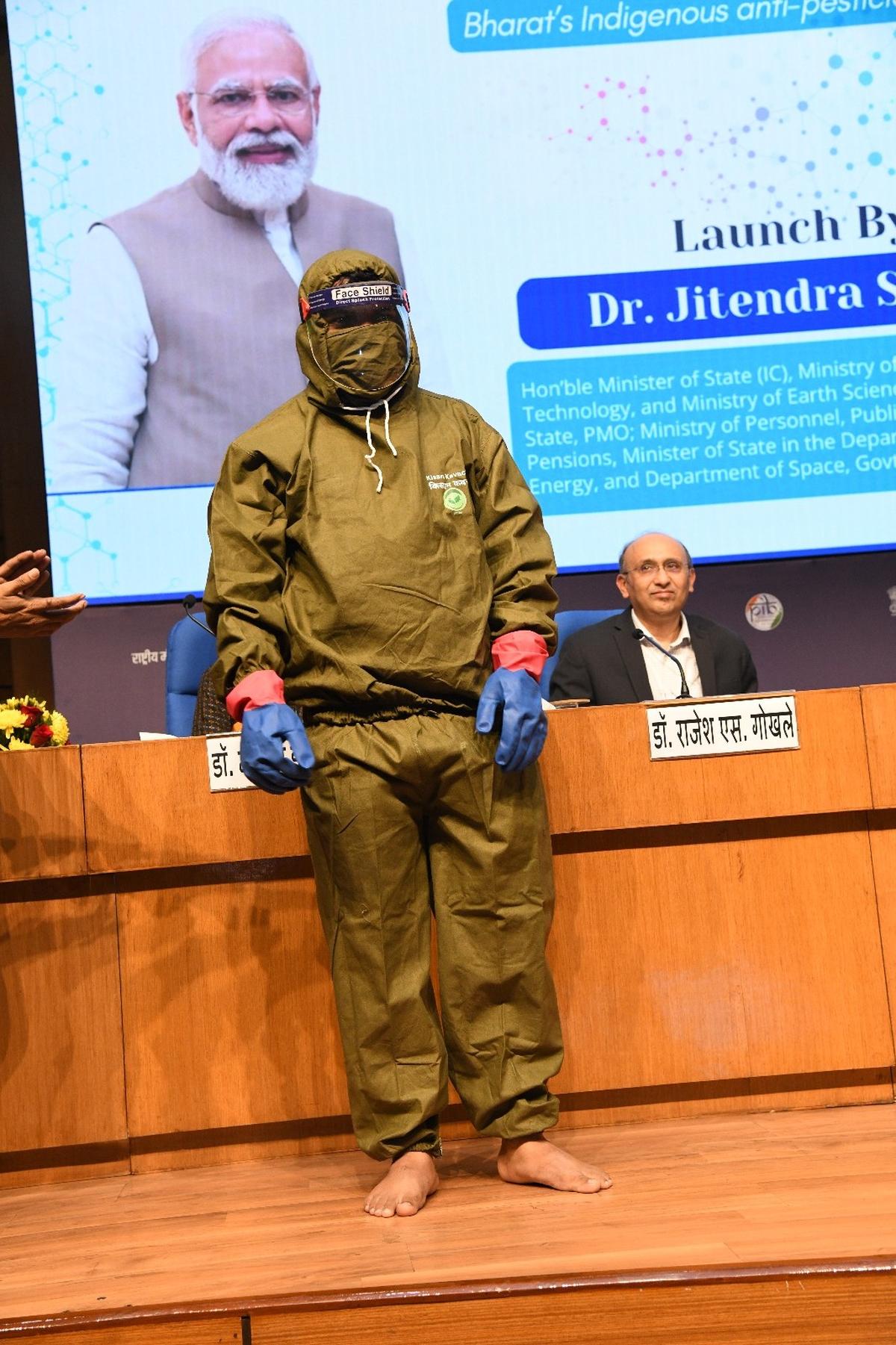
- 18 Dec 2024
In News:
Scientists develop ‘kisan kavach’ to shield farmers from pesticide sprays.
Key Highlights:
- Purpose: The Kisan Kavach is designed to shield farm labourers from harmful pesticide exposure. Pesticides, often neurotoxins, can be detrimental to health, causing symptoms like dizziness, headaches, vomiting, and even death with high exposure.
- Development:
- Developed by Biotechnology Research and Innovation Council (BRIC-inStem), Bangalore, in collaboration with Sepio Health Pvt. Ltd.
- Launched by Union Minister of State for Science and Technology.
- Fabric Technology:
- The suit uses oxime fabric, which chemically breaks down common pesticides on contact, preventing them from penetrating the skin.
- Mechanism: The fabric works through nucleophilic mediated hydrolysis, deactivating pesticides upon contact and preventing pesticide-induced toxicity and lethality.
- Components of the Kit:
- Consists of a trouser, pullover, and face-cover.
- Washable and reusable: The suit retains its protective properties even after 150 washes, in a wide temperature range, and under UV light exposure.
- Affordability:
- Priced at ?4,000 per kit, with efforts underway to reduce costs through increased production.
- Field Testing and Efficacy:
- Animal studies: Rodent tests showed that animals exposed to pesticides and covered with ordinary cotton cloth died within four days, while those with the activated fabric remained safe.
- Human trials are still pending.
- Health Implications:
- Pesticides are linked to chronic health issues, including cancer, as per studies by the National Institute of Nutrition (Indian Council of Medical Research).
- Global Context:
- In 2020, India used 61,000 tonnes of pesticides, despite producing much more (2,58,130 tonnes in 2022-2023).
- Pesticide-related health issues are a major concern, with 60% of India’s adult workforce engaged in agriculture.
- Impact:
- The suit aims to protect farm labourers from pesticide exposure and promote sustainable agriculture.
- It could help reduce health complications and improve working conditions for farmers, who often lack proper protective gear.
- Future Plans:
- Awareness campaigns will be conducted to inform farmers about this protective technology.
- Efforts are underway to make the kit more affordable as demand increases.
Switzerland Suspends MFN Clause in Tax Treaty with India
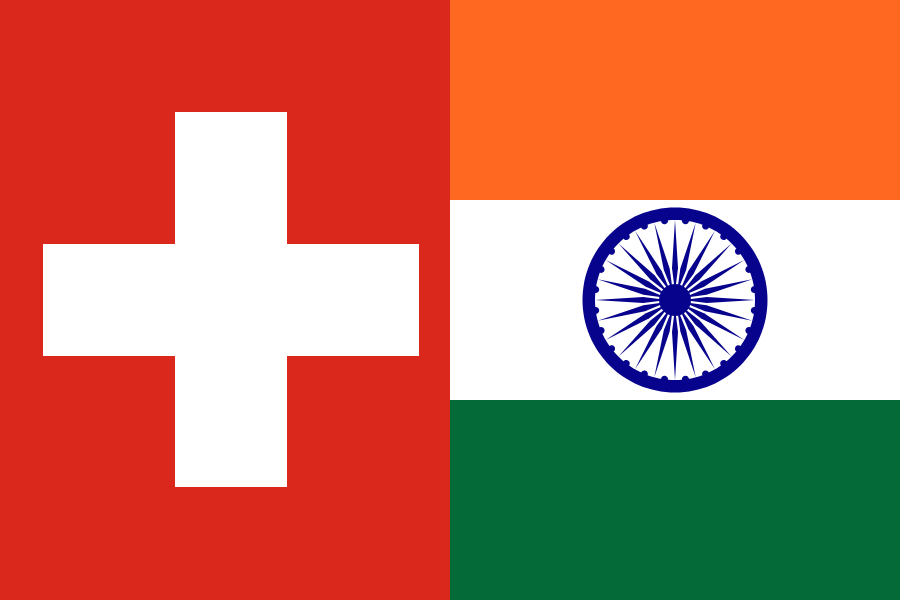
- 14 Dec 2024
In News:
Switzerland scraps MFN status to India, dividend income to face higher tax
Key Highlights:
- Reason for Suspension:
- The suspension follows a 2023 Supreme Court ruling in India, which clarified that the MFN clause in tax treaties is not automatically triggered when a country joins the OECD if the tax treaty with that country was signed before its OECD membership.
- The Court ruled that the Double Taxation Avoidance Agreement (DTAA) cannot be enforced unless it is notified under the Income-Tax Act, 1961.
- Details of the Suspension:
- Starting January 1, 2025, Switzerland will suspend the Most Favoured Nation (MFN) clause in its DTAA with India.
- The MFN clause was part of the India-Switzerland DTAA signed in 1994.
Impact of the Suspension:
- Higher Tax Liabilities for Indian Companies: Withholding tax on dividends from Switzerland will increase from 5% to 10% for Indian companies.
- Effects on Swiss Investments in India: Swiss companies will continue to face a 10% withholding tax on dividends from India, as per the India-Switzerland DTAA.
- Potential Re-evaluation of MFN Clauses by Other Countries: Other countries may reconsider how the MFN clause is applied in their tax treaties with India, following this development.
- No Change for Other Benefits: Other DTAA benefits and investments related to the European Free Trade Association (EFTA) will remain unaffected.
Most Favoured Nation (MFN) Clause Overview:
- Definition: The MFN principle ensures that favorable trading terms given by one WTO member country to another are extended to all other WTO members, promoting non-discrimination.
- Purpose: To ensure equal treatment among trading nations by preventing discrimination, and to promote fair trade and equitable market access.
- Key Features:
- Equal treatment in tariffs, quotas, and trade barriers.
- Members must extend the best terms to all other WTO members.
- Origin: The MFN principle was established after World War II as a cornerstone of the multilateral trading system under the WTO.
- Exceptions:
- Bilateral or regional trade agreements.
- Special access granted to developing countries.
- Non-WTO members (e.g., Iran, North Korea) are not bound by MFN rules.
- Removal of MFN:
- There is no formal procedure under the WTO to suspend MFN status.
- Countries are not obligated to notify the WTO when suspending or removing MFN treatment.
Recent Development:
- From January 1, 2025, Indian companies will face higher withholding tax (10%) on income sourced from Switzerland, as a result of the MFN clause suspension.
Under the Sal Tree Theatre Festival
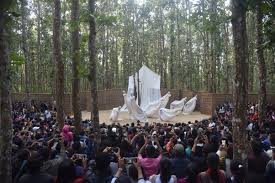
- 14 Dec 2024
In News:
“Under the Sal Tree” Theatre Festival, held annually in Rampur, Assam, promotes eco-friendly and sustainable practices in theatre while showcasing rich cultural diversity.
Overview:
- Location: Rampur village, Goalpara district, Assam
- Organizer: Badungduppa Kalakendra, a social and cultural organization
- Founded: 1998 by Sukracharjya Rabha
- Festival Focus: Eco-friendly theatre practices, cultural diversity, and sustainability
Key Features
- Unique Setting: Open-air festival under Sal trees, with no artificial lighting or electric sound systems.
- Sustainability:
- No use of plastic.
- Carbon-neutral, with eco-friendly materials such as bamboo, straw, and cane.
- Performances in natural daylight, avoiding electric lights.
- International Participation: Theatre groups from countries like Poland, South Korea, Brazil, Sri Lanka, Bangladesh, North Korea, Bolivia, and Holland have performed.
- Cultural Celebration: Highlights indigenous art forms, languages, and traditions, e.g., Rabha and Bodo plays.
Festival Activities
- Performances:
- Includes plays like “Dadan Raja” (Rabha language play), “Kindhan Charithiram” (Tamil), and “Kisan Raj” (Hindi).
- Focus on themes such as societal change and resilience of farmers.
- Workshops & Community Projects: For performing artists, promoting artistic innovation and social impact.
- Anniversary Celebrations:
- 25th anniversary celebrated with special events and book releases, e.g., “Resonance: Echoing the Spirit of Badungduppa” and “Sukracharjya Rabha on the Back Stage”.
Impact & Legacy
- Theatre Movement: Celebrates art amidst nature, breaking geographical barriers despite the remote location.
- Founder’s Vision: Sukracharjya Rabha believed in the synergy between art and nature, aiming to bring social change through theatre.
- Local Involvement:
- 20 resident artists contribute to the festival’s success.
- Festival has become a major cultural attraction in Assam, drawing thousands of theatre enthusiasts.
Egypt becomes 2nd country in 2024 to be declared ‘malaria-free’
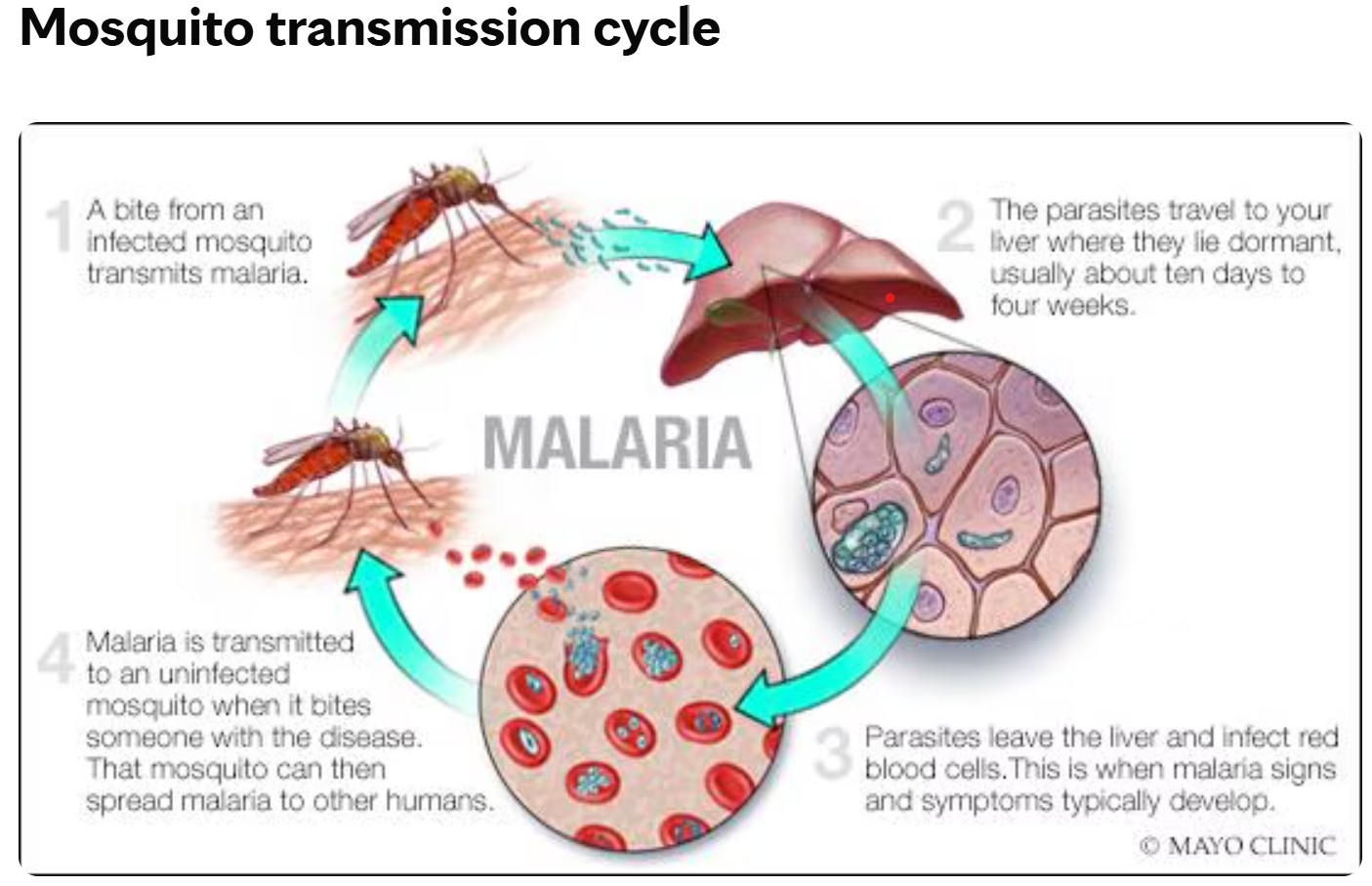
- 22 Oct 2024
In News:
Egypt was officially declared ‘malaria-free’ by the World Health Organization (WHO).
Key Highlights:
- Egypt became the second country (after Cabo Verde) to be certified malaria-free in 2024.
- It is the fifth African country to achieve this milestone, joining Morocco, UAE, and Cabo Verde in the malaria-free list.
- WHO Certification Criteria:
- A country is certified malaria-free if it can prove the Anopheles mosquito-borne malaria transmission chain has been broken for at least three years.
- The country must also have the capacity to prevent the re-establishment of transmission.
- About Malaria:
- Malaria is an acute febrile illness caused by Plasmodium parasites, transmitted through the bites of infected female Anopheles mosquitoes.
- It is a life-threatening disease primarily found in tropical countries.
- Symptoms include fever, headache, and chills, which can be mild and difficult to diagnose.
- Prevention mainly involves vector control interventions, and treatment involves early diagnosis and use of antimalarial drugs.
Russia's Izdeliye 305 (LMUR) Missile
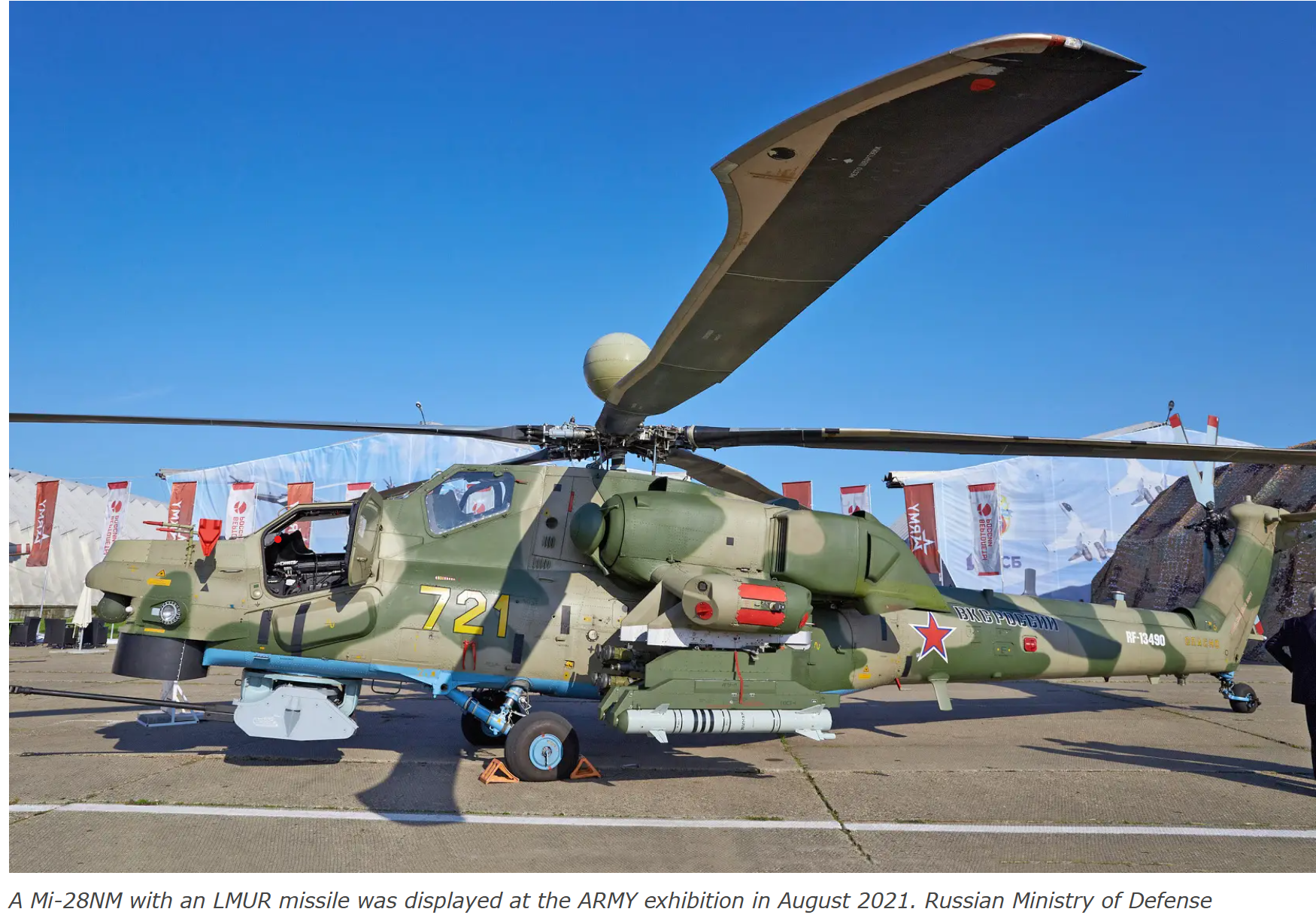
- 21 Oct 2024
In News:
Russian state corporation Rostec has claimed that its Light Multipurpose Guided Rocket, also known as Izdeliye 305 or “Product 305,” has demonstrated remarkable resistance to jamming and interference on the battlefield in Ukraine.
Missile Overview
- Name: Izdeliye 305 (Product 305), also known as LMUR (Light Multipurpose Guided Rocket)
- Primary Use: Deployed by Russia’s Mi-28NM and Ka-52M attack helicopters.
- Function: Designed to target and destroy armored vehicles, fortifications, pillboxes, and watercraft with high precision.
Key Features
- Sniper-Like Accuracy: The missile is touted for its exceptional precision in targeting, making it one of Russia’s most successful guided weapons.
- Resistance to Jamming: The missile’s control channel has shown remarkable resistance to enemy electronic warfare (EW) systems, making it effective even in contested environments.
- No instances of the missile's control channel being suppressed during the ongoing Ukraine conflict.
- Versatile Guidance Systems: The missile operates in several modes:
- Fire-and-Forget: The missile locks onto the target before launch and operates autonomously post-launch.
- Remote Control Mode: The operator guides the missile to the target after it locks onto coordinates and transmits live imagery to the operator’s screen.
- Inertial + Homing Mode: The missile initially flies inertially toward target coordinates, then activates its homing system for final target guidance.
- High Explosive Warhead: Equipped with a 25-kg high-explosive fragmentation warhead, the LMUR is effective against a variety of targets.
Technical Specifications
- Weight: 105 kg (231 lbs)
- Range: Up to 9 miles, double the range of traditional Russian anti-tank missiles, providing the tactical advantage of engaging from beyond line-of-sight.
- Warhead: 25 kg high-explosive fragmentation for effective target destruction.
- Guidance: A combination of inertial navigation, satellite positioning, thermal imaging, and a two-way communication channel for real-time control.
Deployment and Use
- Helicopter Integration: Primarily used on Mi-28NM and Ka-52M attack helicopters, and also on the Mi-8MNP-2 for special operations.
- Combat Experience:
- The missile was actively used in Ukraine where it played a key role in countering Ukraine’s NATO-backed counteroffensive operations.
- It was previously tested in Syria against various targets, showcasing its capabilities before full operational deployment in 2022.
Significance in Ukraine Conflict
- Impact on Ukrainian Forces: The missile’s long range and resistance to EW have made it a critical component of Russia’s aerial operations, hampering Ukraine’s battlefield progress, particularly against heavily fortified positions and NATO-backed counteroffensive efforts.
Strategic Advantage: The missile’s ability to engage targets from a distance while evading jamming attempts gives it a significant edge in modern warfare.
National Water Awards 2023

- 21 Oct 2024
In News:
The Hon’ble President of India Smt. Droupadi Murmu will confer the 5th National Water Awards 2023 on October 22nd 2024 at Vigyan Bhawan, New Delhi.
Organizing Body:
- Ministry: Ministry of Jal Shakti
- Department: Department of Water Resources, River Development, and Ganga Rejuvenation (DoWR, RD & GR)
- Purpose: To recognize and honor individuals, organizations, and bodies that have made significant contributions to water conservation and management.
Award Categories
- Best State
- Best District
- Best Village Panchayat
- Best Urban Local Body
- Best School or College
- Best Industry
- Best Water User Association
- Best Institution (other than school or college)
- Best Civil Society Organization
Winners
- Best State:
- 1st Prize: Odisha
- 2nd Prize: Uttar Pradesh
- 3rd Prize (joint): Gujarat & Puducherry
- Other Awards: Winners in the remaining categories have been recognized, with citations, trophies, and cash prizes provided in certain categories.
Objectives of the National Water Awards
- Promote Water Conservation: Raise awareness about the importance of water and encourage effective water usage practices.
- Recognize Efforts: Celebrate the work of individuals, institutions, and organizations contributing to the government’s vision of a ‘Jal Samridh Bharat’ (Water-rich India).
- National Campaign: Under the guidance of Hon’ble Prime Minister, the Ministry of Jal Shakti has been working to spread awareness on water management and conservation through extensive national campaigns.
History and Background
- The National Water Awards (NWAs) were launched in 2018 by the DoWR, RD & GR to foster awareness and action on water-related issues.
- Awards were given for 2019, 2020, and 2022, but there were no awards in 2021 due to the COVID-19 pandemic.
- The awards aim to inspire best practices in water usage, conservation, and management across India, involving government bodies, industries, communities, and civil society.
Significance
- The National Water Awards serve as a platform to recognize the innovative initiatives taken by various stakeholders in addressing water challenges.
The awards contribute to furthering the government’s mission of achieving sustainable water management practices across the nation.
Funga Taxonomic Kingdom
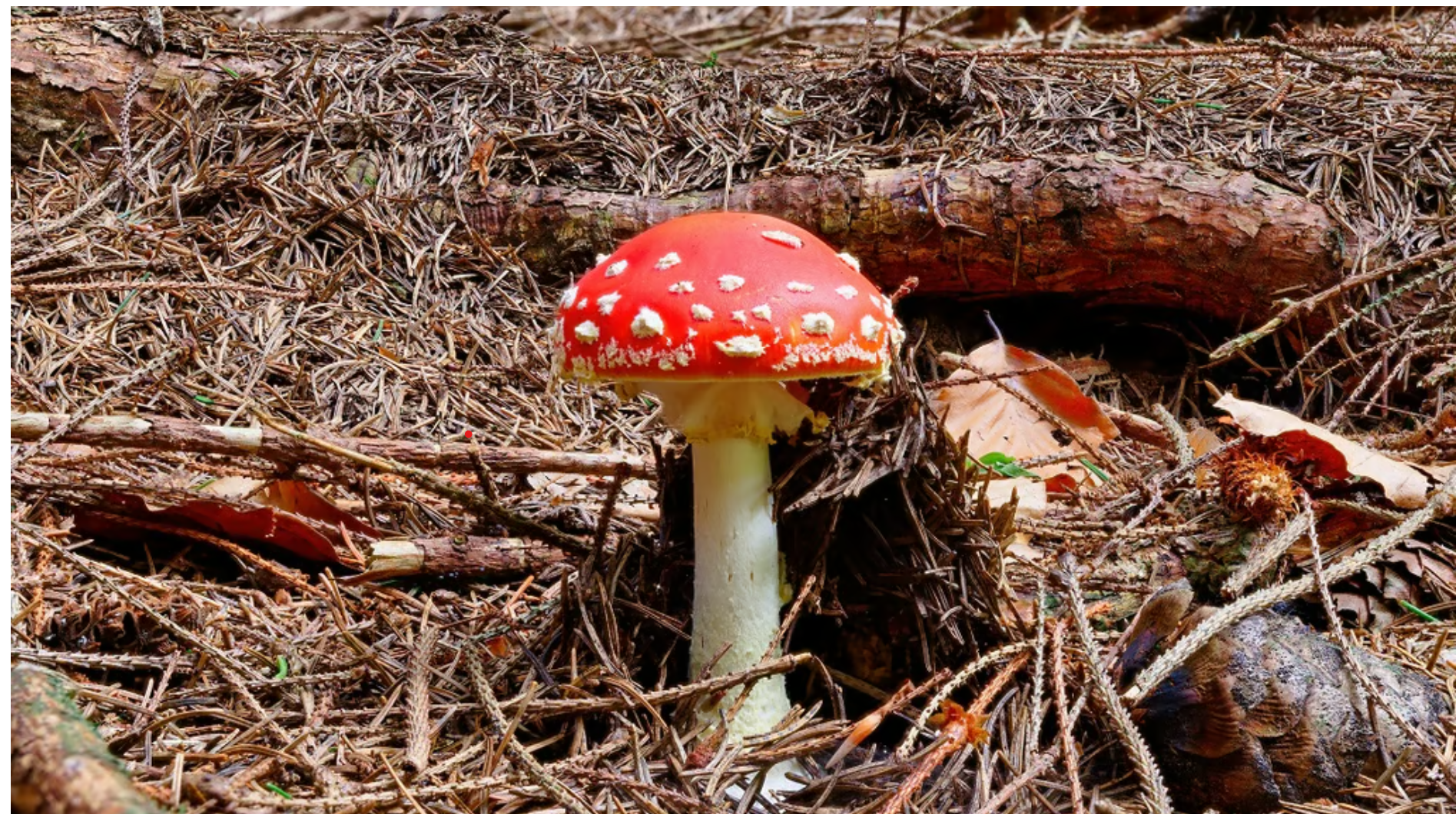
- 21 Oct 2024
In News:
- Chile and the United Kingdom have prepared a proposal to recognize fungi as an independent kingdom, termed "Funga", alongside flora (plants) and fauna (animals).
- This will be presented at the 16th Conference of Parties (COP16) of the UN Convention on Biological Diversity (CBD), to be held in Cali, Colombia in October 2024.
- Why Funga?
- Fungi (e.g., mushrooms, moulds, yeast, lichen) play crucial ecological roles, but have historically been overlooked in conservation strategies.
- Fungi contribute significantly to decomposition, forest regeneration, carbon sequestration, and the global nutrient cycle.
- The recognition aims to strengthen fungal conservation by integrating fungi into global legislation and policies.
- Ecological Importance of Fungi:
- Decomposition: Fungi break down organic matter, facilitating nutrient recycling in ecosystems.
- Symbiotic Relationships: Many fungi form crucial symbiotic relationships with plants (e.g., mycorrhizal associations) and animals.
- Climate Mitigation: Boreal forest fungi absorb large amounts of carbon through symbiosis with plants, playing a role in mitigating climate change.
- Pollution Remediation: Fungi can help clean polluted soils by breaking down toxins.
- Food Production: Fungi are essential for producing common foods like bread, cheese, wine, beer, and chocolate.
- Health: Fungi produce antibiotics (e.g., penicillin) and aid in mammalian digestion.
- Scientific Recognition:
- In August 2021, the International Union for Conservation of Nature (IUCN) recognized fungi as one of the three kingdoms of life, alongside plants and animals.
- The 3F initiative (Flora, Fauna, and Funga), led by Giuliana Furci, aims to promote the international recognition and protection of fungi.
- Diversity and Research Gaps:
- Only 8% of the estimated 2.2 to 3.8 million fungal species have been formally described.
- Approximately 2,000 new fungal species are discovered annually, indicating the vast underexplored diversity of fungi.
- Threats to Fungi:
- Fungi face significant threats from deforestation, climate change, pollution, overharvesting, and fungicide use.
- These threats disrupt the symbiotic relationships fungi share with plants and animals, leading to ecosystem instability.
- Nitrogen enrichment in soils and habitat loss further exacerbate these risks.
Key Facts About Fungi
- Biological Characteristics:
- Fungi are eukaryotic organisms with rigid cell walls made of chitin (distinct from the cellulose found in plant cell walls).
- They are heterotrophic, meaning they absorb nutrients from their environment through external digestion (secreting enzymes to break down organic material before absorption).
- Reproductive Strategies:
- Fungi reproduce both asexually (via spores) and sexually, ensuring their proliferation across ecosystems.
- Growth Form:
- Fungi grow primarily as mycelium, a network of hyphae (filamentous structures) that helps in nutrient absorption and environmental interaction.
- Symbiotic Relationships:
- Fungi form mycorrhizal relationships with plants, enhancing nutrient exchange, and lichen associations with algae, providing mutual benefits in extreme environments.
WHO Approves First Mpox Diagnostic Test for Emergency Use

- 21 Oct 2024
In News:
- The World Health Organization (WHO) has listed the Alinity m MPXV Assay under its Emergency Use Listing (EUL) procedure.
- The test, developed by Abbott Molecular Inc., will help expand diagnostic capacity in countries experiencing Mpox outbreaks, particularly in Africa.
- Importance of Early Diagnosis:
- Early diagnosis enables timely treatment and virus control.
- It is critical for improving Mpox surveillance, especially in areas with high transmission.
Current Mpox Situation
- Global Context:
- Over 30,000 suspected cases reported in Africa in 2024.
- India has reported 30 cases since the WHO declared Mpox a global health emergency in August 2024.
- Testing Capacity:
- Limited testing capacity and delays in confirming cases have been a significant barrier to controlling the spread, especially in Africa.
- In India, 35 laboratories are currently equipped to test suspected Mpox cases.
Mpox Diagnostic Test Details
- Alinity m MPXV Assay:
- A real-time PCR test that detects monkeypox virus (MPXV) DNA from skin lesion swabs.
- Used by trained clinical laboratory personnel proficient in PCR techniques.
- Helps confirm suspected Mpox cases from pustular or vesicular rash samples.
- WHO's Role:
- The Emergency Use Listing (EUL) procedure accelerates the availability of life-saving products during public health emergencies.
- WHO aims to increase access to quality-assured diagnostics in regions most affected by Mpox.
About Mpox
- What is Mpox?
- Zoonotic disease caused by the monkeypox virus, part of the Orthopoxvirus genus (family Poxviridae).
- Closely related to smallpox, but generally less severe in humans.
- Transmission:
- Spread via physical contact with infected lesions, body fluids, or contaminated materials.
- Can also spread through animal bites, or activities like hunting, skinning, or eating infected animals.
- Two Clades:
- Clade I: Predominantly in Central and East Africa.
- Clade II: More common in West Africa; linked to the 2022 outbreak.
- Symptoms:
- Rashes, blisters, fever, sore throat, headache, muscle aches, back pain, swollen lymph nodes.
- Lesions typically scab over as they heal.
- Most people experience mild symptoms, but children, pregnant women, and immunocompromised individuals are at greater risk.
Treatment and Prevention
- No Specific Cure:
- Supportive care (e.g., pain relief, hydration) is recommended.
- In some cases, antivirals like tecovirimat (developed for smallpox) may be used under exceptional circumstances.
- Vaccination:
- Three smallpox vaccines are recommended for at-risk individuals: MVA-BN, LC16, and OrthopoxVac.
- Mass vaccination is not recommended by WHO.
New 'Lady Justice' Statue in the Supreme Court
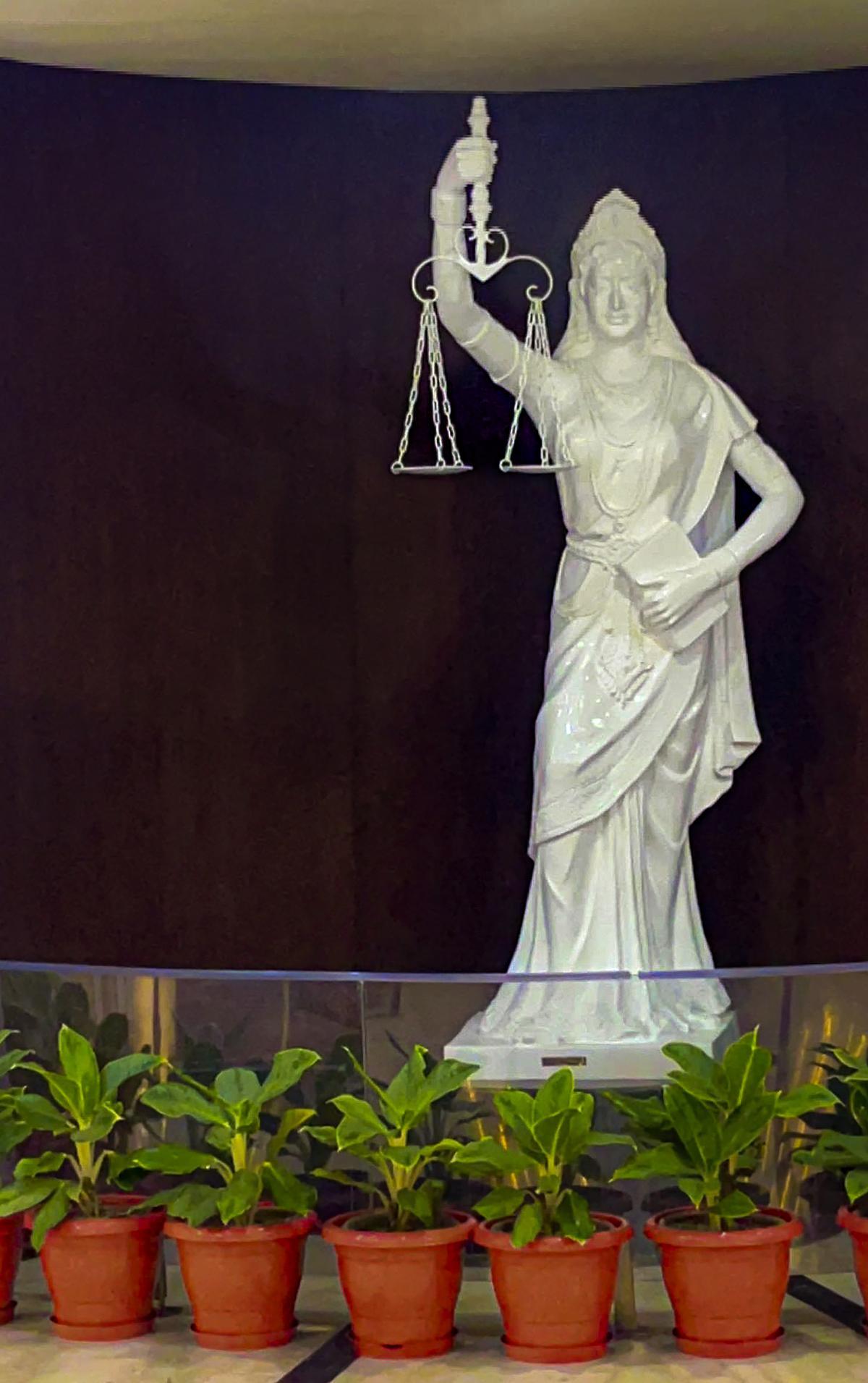
- 21 Oct 2024
In News:
Recently, the Chief Justice of India unveiled the ‘new lady justice’ statue in the Supreme Court premises that replaced the ‘original lady justice’. The new statue is clothed in a saree, has shed the blindfold and holds scales on one hand and the Indian Constitution on the other.
Symbolism of the New Statue
- Design:
- Clad in a saree, symbolizing Indian tradition.
- No blindfold, with open eyes, conveying that justice "sees" all equally.
- Holds the Indian Constitution in one hand and scales of justice in the other.
- Significance:
- Aimed at decolonization of the judiciary, replacing colonial symbols with representations that reflect India's identity and values.
- The open eyes represent that justice is not blind, addressing social diversity, discrimination, and constitutional provisions for upliftment of underprivileged sections.
- The Constitution in place of a sword symbolizes its supremacy in India’s legal system.
Historical Context of Lady Justice
- Origin:
- Rooted in Roman mythology; Justitia, the goddess of justice, symbolized by scales, sword, and a blindfold.
- Blindfold added in the Renaissance as a satire on corrupt legal systems but later reinterpreted as a symbol of impartiality, representing justice without bias, irrespective of wealth, power, or social status.
- Scales: Balance in weighing both sides before judgment.
- Sword: Authority and power of law, to protect and punish.
Rationale for Change in India
- Colonial Legacy:
- The 'lady justice' symbol became prominent during British rule, reflecting colonial influence in India's legal system.
- Decolonial Intent:
- The shift from Western attire (robe) to a saree connects the statue to Indian traditions.
- Open eyes emphasize that Indian justice is not blind and addresses social inequalities directly.
- The Constitution's prominence underscores its role as the supreme guiding document in the Indian legal system.
Current Judicial System Challenges
- Pending Cases:
- Over 5 crore cases are pending across courts in India.
- Supreme Court recently dismissed a petition for a three-year timeline to resolve the backlog, citing the overwhelming volume of cases.
- Urgent Reforms Needed:
- Finalize the Memorandum of Procedure:
- Still pending after 8 years; addresses transparency and accountability in judicial appointments.
- Representation in Judiciary:
-
- Backward classes, SCs, STs, and minorities are underrepresented in higher judiciary (less than 25%), and women are underrepresented (less than 15%).
- Appointments should reflect India's social diversity.
-
- Vacancies in Courts:
-
- High Courts operate at 60-70% strength, contributing to a massive case backlog of over 60 lakh cases.
- Lower courts have 4.4 crore pending cases; vacancies must be filled by states promptly.
- Priority for Constitutional Cases:
-
- Cases concerning the constitutional validity of laws and individual liberty should be prioritized by the judiciary.
Conclusion
- The new Lady Justice statue is not just a symbolic change but reflects a broader effort to realign India’s judiciary with its social and constitutional values.
- To ensure fair and prompt justice, there is an urgent need to address systemic delays, fill vacancies, and improve diversity in judicial appointments.
- Only then will the judiciary truly embody the principles of impartiality and justice, as represented by the new statue.
South Karanpura Coalfield
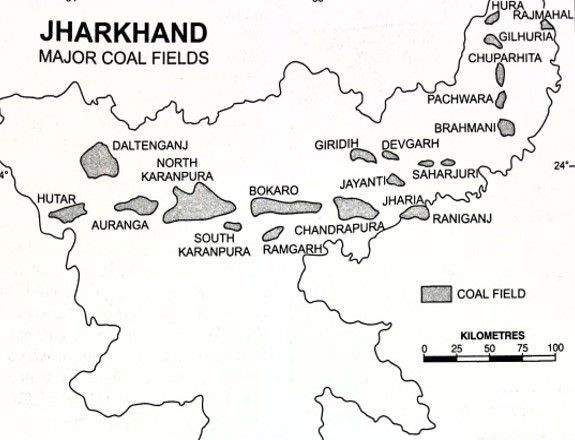
- 11 Oct 2024
In News:
Recent research has highlighted significant shale gas generation potential in the eastern region of the South Karanpura coalfield, located in the Ramgarh district of Jharkhand, India. Evidence from microscopic palynomorphs and organic remains, combined with geochemical assessments, indicates that the eastern Sirka coalfield demonstrates a higher potential for hydrocarbon generation compared to the Giddi coalfield to the north.
Overview of the South Karanpura Coalfield
- Location and Size: The South Karanpura coalfield is situated along the Chingara fault and covers approximately 195 square kilometers, housing an estimated 5,757.85 million tonnes of coal reserves.
- Composition: This region is rich in coal, carbonaceous shale, and sandstone layers, making it well-established for its substantial coal deposits.
- Emerging Focus: With increasing energy demands and interest in hydrocarbon exploration, there is a growing emphasis on the potential for coal bed methane and shale gas generation in this area, aligning with national energy strategies for greener energy sources.
Research Methodology
Scientists from the Birbal Sahni Institute of Palaeosciences (BSIP) conducted a comprehensive study to evaluate hydrocarbon generation potential. The research involved:
- Sample Collection: Sediments were collected from coal, carbonaceous shale, and sandstone layers at the Sirka and Giddi C collieries in Hazaribagh district.
- Analysis Techniques: The study utilized palynological analysis of microscopic remains, alongside Rock-Eval pyrolysis to assess the potential of the rock samples. Key parameters analyzed included:
- Palynofacies
- Free hydrocarbons (S1)
- Heavy hydrocarbons (S2)
- Pyrolyzable carbon (PC)
- Residual hydrocarbon (RC)
The collected samples, which date back to the Permian (Barakar) period, indicate favorable conditions for high hydrocarbon resource potential in the eastern South Karanpura coalfield.
Shale Gas Overview
Shale gas is an unconventional natural resource found at depths of 2,500 to 5,000 meters, deeper than conventional crude oil. Its extraction involves deep vertical drilling followed by horizontal drilling, with hydraulic fracturing (fracking) being the most common method used to access gas trapped in low-permeability rocks.
New Cancer Therapy Target
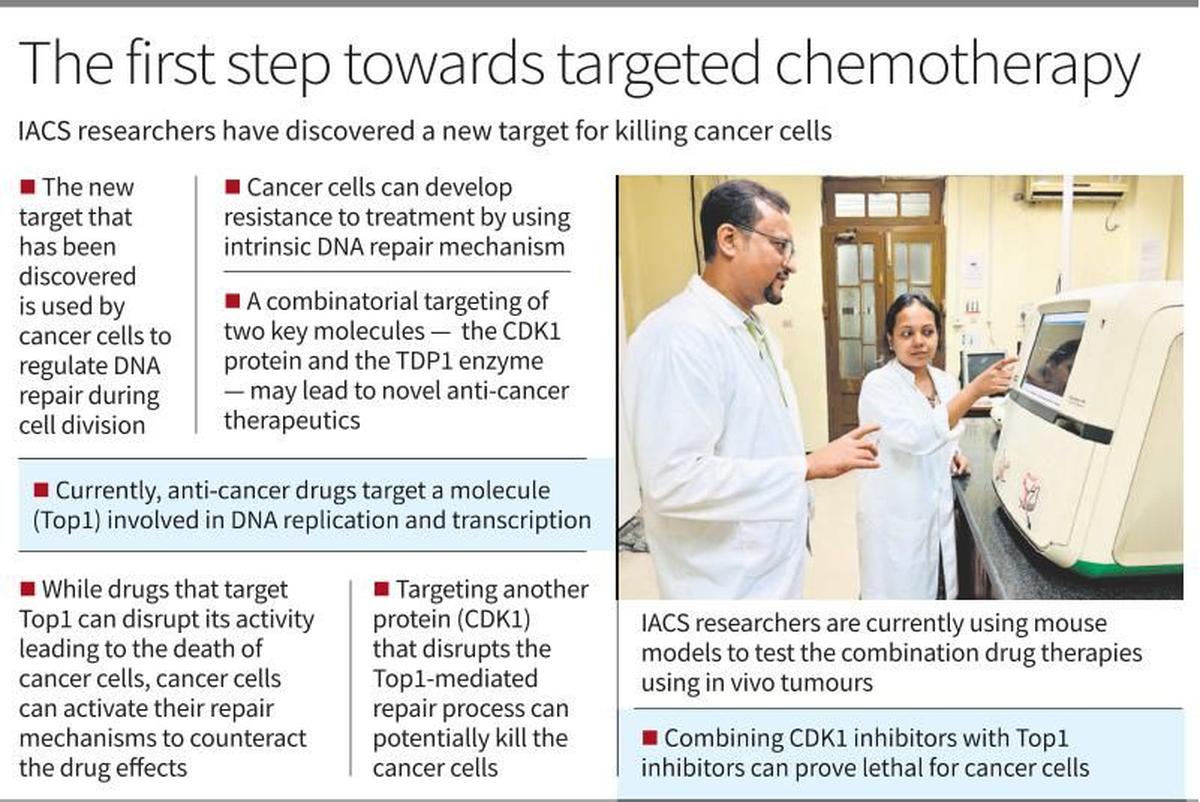
- 11 Oct 2024
In News:
Scientists have identified a promising new target for cancer treatment by activating a DNA repair enzyme called TDP1. This approach suggests a combination therapy that could serve as a potential precision medicine for patients resistant to current treatments.
- Current Treatment Limitations:
- Existing anticancer drugs (e.g., Camptothecin, Topotecan, Irinotecan) target Topoisomerase 1 (Top1), essential for DNA replication and transcription.
- Cancer cells frequently develop resistance to these single-agent therapies, necessitating alternative treatment strategies.
- Research Insights:
- Conducted by scientists at the Indian Association for the Cultivation of Science (IACS), Kolkata, under the Department of Science and Technology (DST).
- The study focused on how cancer cells repair DNA during cell division and respond to chemotherapy targeting Top1.
- Key Findings:
- The research, published in The EMBO Journal 2024, highlights two critical proteins:
- Cyclin-dependent kinase 1 (CDK1)
- Tyrosyl-DNA phosphodiesterase 1 (TDP1)
- CDK1 regulates the DNA repair process, while TDP1 helps cancer cells survive by repairing drug-induced Top1 damage.
- The research, published in The EMBO Journal 2024, highlights two critical proteins:
- Mechanism of Action:
- TDP1 repairs Top1 that is trapped during the S phase of DNA replication.
- The role of TDP1 during the mitotic phase was previously unknown; CDK1 phosphorylates TDP1, enhancing its repair capabilities.
- Phosphorylation is crucial for efficient DNA repair, allowing cancer cells to withstand Top1-targeted chemotherapy.
- Potential for Combination Therapy:
- Targeting both CDK1 and TDP1 could help overcome drug resistance and improve treatment efficacy.
- Suggested use of CDK1 inhibitors (e.g., avotaciclib, alvocidib) alongside Top1 inhibitors may disrupt DNA repair and halt the cell cycle, increasing cancer cell mortality.
- Research Implications:
- Phosphorylation of TDP1 by CDK1 is essential for managing DNA damage in cancer cells.
- Inhibiting CDK1 may induce chromosome instability, effectively targeting cancer cells.
- The combination of CDK1 and Top1 inhibitors aims to enhance cancer treatment effectiveness.
- Future Directions:
- Identifying CDK1 and TDP1 as potential targets paves the way for developing new cancer therapies that inhibit DNA repair mechanisms.
- Further studies using animal models are ongoing to validate this innovative approach for precision medicine in treating resistant cancers.
NABARD Survey on Rural Financial Inclusion
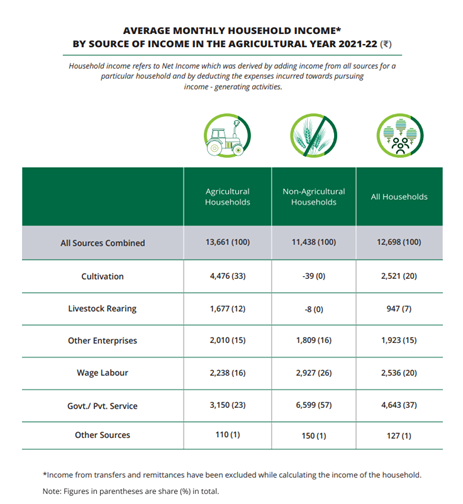
- 11 Oct 2024
In News:
NABARD has published the findings from its second All India Rural Financial Inclusion Survey (NAFIS) for 2021-22, which offers primary data based on a survey of 1 lakh rural households, covering various economic and financial indicators in the post-COVID period.
Survey Overview:
- Inaugural survey conducted for 2016-17, results released in August 2018.
- Aims to analyze changes in rural economic conditions since 2016-17.
- Included all 28 states and Union Territories of Jammu & Kashmir and Ladakh.
Insights from NAFIS 2021-22
- Increase in Average Monthly Income:
- Average monthly income rose by 57.6% from Rs. 8,059 (2016-17) to Rs. 12,698 (2021-22).
- Nominal CAGR of 9.5%, with annual nominal GDP growth at 9%.
- Agricultural households earned Rs. 13,661; non-agricultural households earned Rs. 11,438.
- Salaried employment contributed 37% to total income; cultivation contributed one-third for agricultural households.
- Rise in Average Monthly Expenditure:
- Average monthly expenditure increased from Rs. 6,646 (2016-17) to Rs. 11,262 (2021-22).
- Agricultural households reported higher consumption (Rs. 11,710) compared to non-agricultural households (Rs. 10,675).
- Expenditure exceeded Rs. 17,000 in states like Goa and Jammu & Kashmir.
- Increase in Financial Savings:
- Annual average financial savings grew to Rs. 13,209 in 2021-22 from Rs. 9,104 in 2016-17.
- 66% of households saved in 2021-22, up from 50.6% in 2016-17.
- 71% of agricultural households reported savings, compared to 58% of non-agricultural households.
- States like Uttarakhand (93%) and Uttar Pradesh (84%) had high saving rates, while Goa (29%) and Kerala (35%) had lower rates.
- Kisan Credit Card (KCC) Coverage:
- 44% of agricultural households possessed a valid KCC.
- Among larger landholders and those with recent agricultural loans, 77% reported having a KCC.
- Insurance Coverage:
- Households with at least one insured member increased from 25.5% (2016-17) to 80.3% (2021-22).
- Vehicle insurance was most common (55%), followed by life insurance (24%).
- Pension Coverage:
- Households with at least one member receiving any form of pension rose from 18.9% to 23.5%.
- 54% of households with members over 60 years old reported receiving a pension.
- Financial Literacy:
- Good financial literacy increased by 17 percentage points, from 33.9% to 51.3%.
- Sound financial behavior improved from 56.4% to 72.8%.
Conclusion
- The NAFIS 2021-22 highlights significant advancements in rural financial inclusion since 2016-17.
- Improvements in income, savings, insurance coverage, and financial literacy are notable.
- Government welfare schemes (e.g., PM Kisan, MGNREGS) have positively impacted rural lives.
- Continued support and investment in rural development are essential for economic empowerment and financial security in India's rural population.
Colombo Security Conclave
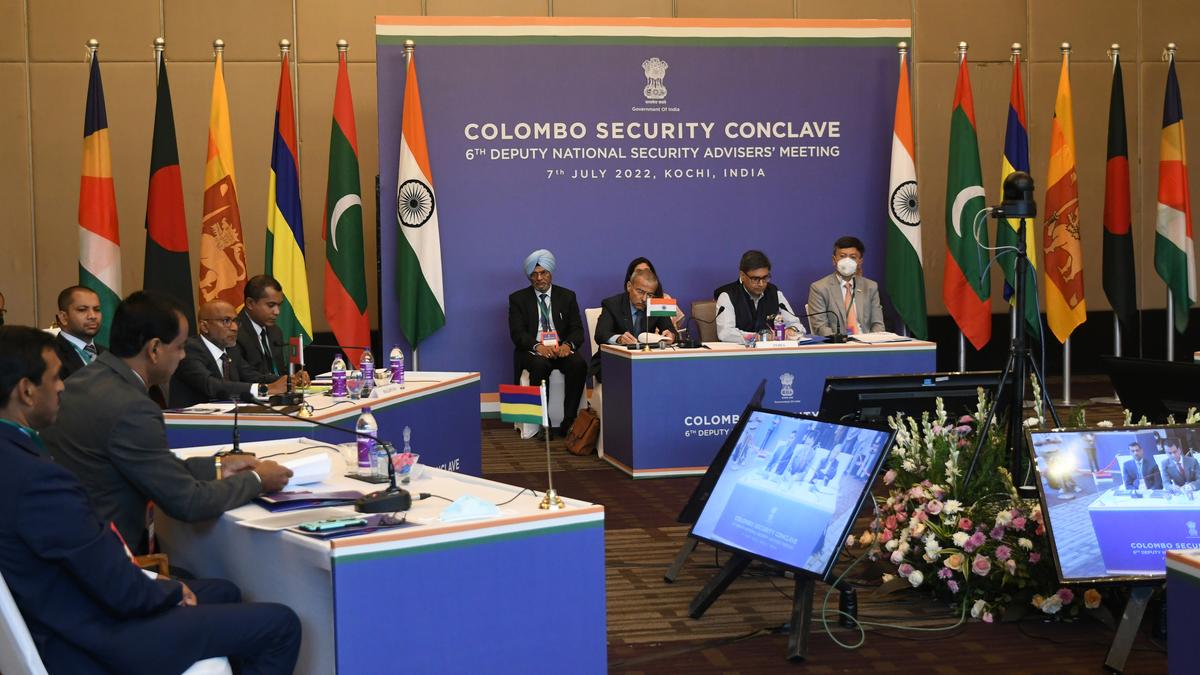
- 11 Oct 2024
In News:
The Colombo Security Conclave (CSC) reached a milestone on August 30, 2024 with India, Sri Lanka, the Maldives and Mauritius signing a Charter and a memorandum of understanding, for the establishment of the CSC secretariat.
Key Facts:
Background of CSC:
- Originally called the NSA Trilateral on Maritime Security, the CSC was established in 2011 among India, Sri Lanka, and the Maldives. The initiative aimed to bolster maritime security in the Indian Ocean Region.
Membership:
- The founding members include India, Sri Lanka, and the Maldives. Mauritius joined in 2022, and Bangladesh became a member in 2024. Seychelles participates as an observer state.
Goals of CSC:
The CSC aims to foster cooperation in five main areas:
- Maritime safety and security
- Counterterrorism and prevention of radicalization
- Combating trafficking and transnational organized crime
- Cybersecurity and safeguarding critical infrastructure
- Humanitarian assistance and disaster relief
Defence Exercises:
- In November 2021, India, Sri Lanka, and the Maldives held Exercise Dosti XV in the Maldives, marking their first joint military exercise in the Arabian Sea under the CSC framework.
Nobel Prize in Literature 2024

- 11 Oct 2024
In News:
The Nobel Prize in Literature 2024 was awarded to South Korean author Han Kang “for her intense poetic prose that confronts historical traumas and exposes the fragility of human life.”
Key Details:
About South Korean author Han Kang
- Literary Style: Known for her physical empathy and metaphorical style; addresses extreme life stories.
- Career Beginnings:
- Started in 1993 with poetry in Literature and Society.
- Prose debut in 1995 with Love of Yeosu.
- Major Work:
- The Vegetarian (2007; English translation 2015).
- Explores violent consequences of protagonist Yeong-hye's refusal to conform to societal norms regarding food.
- Background:
- Born in 1970 in Gwangju, South Korea; later moved to Seoul.
- Comes from a literary family; father is a noted novelist.
- Engaged in art and music, influencing her writing.
- Significance: First South Korean writer to receive the Nobel Prize in Literature.
Previous Nobel Laureate
- 2023 Awardee: Jon Olav Fosse, Norwegian author.
- Contribution: Recognized for "innovative plays and prose which give voice to the unsayable."
Overview of the Nobel Prize
- Definition: Prestigious awards in six fields for those who have conferred the greatest benefit to humankind.
- Fields: Physics, Chemistry, Physiology or Medicine, Literature, Peace, and Economic Sciences.
- Peace Prize: Awarded for advancing international fellowship and promoting peace.
- Establishment: Founded by Alfred Nobel in his will dated 27 November 1895.
- Nobel's Background:
- Born on 21 October 1833 in Stockholm, Sweden.
- Noted for inventing dynamite; had interests in peace, poetry, and drama.
- Died in 1896; allocated his fortune for the prizes.
- First Award: Presented on 10 December 1901.
Prize Money
- Current award amount: $1.1 million per prize.
Note:
Rabindranath Tagore:
- Awarded the Nobel Prize in Literature in 1913 for his profound literary contributions.
- Notable works include Manasi, Gitanjali, and Chitra.
RBI's Recent Monetary Policy Review
- 10 Oct 2024
In News:
The Reserve Bank of India (RBI) maintained its benchmark interest rate at 6.5% for the 10th consecutive monetary policy review since April 2023. The policy stance was shifted to “neutral,” indicating potential for a future rate cut.
Monetary Policy Committee (MPC) Overview
- The decision to keep interest rates unchanged was supported by a majority of five out of six members of the MPC, which convened for three days starting October 7.
- The change in policy stance from “withdrawal of accommodation” to “neutral” was unanimously agreed upon.
Focus Areas
- The MPC emphasized the need for a durable alignment of inflation with targets while supporting economic growth.
- Macroeconomic parameters for inflation and growth were described as well balanced.
Inflation Insights
- A moderation in headline inflation is expected to reverse in September, likely remaining elevated due to adverse base effects.
- Retail inflation was below the central bank’s median target of 4% in July and August.
Growth Projections
- The RBI maintained its 7.2% GDP growth projection and a 4.5% average inflation estimate for 2024-25, with risks evenly balanced.
- Second-quarter inflation projection was revised down to 4.1% from 4.4%, while a rise to 4.8% is expected for the October to December quarter.
Domestic Growth and Investment
- Domestic growth remains robust, with private consumption and investment growing together.
- This growth has provided the RBI with the capacity to prioritize inflation control to achieve the 4% target.
Risks to Inflation
The Governor highlighted that unexpected weather events and escalating geopolitical conflicts pose significant upside risks to inflation.
National Maritime Heritage Complex (NMHC)
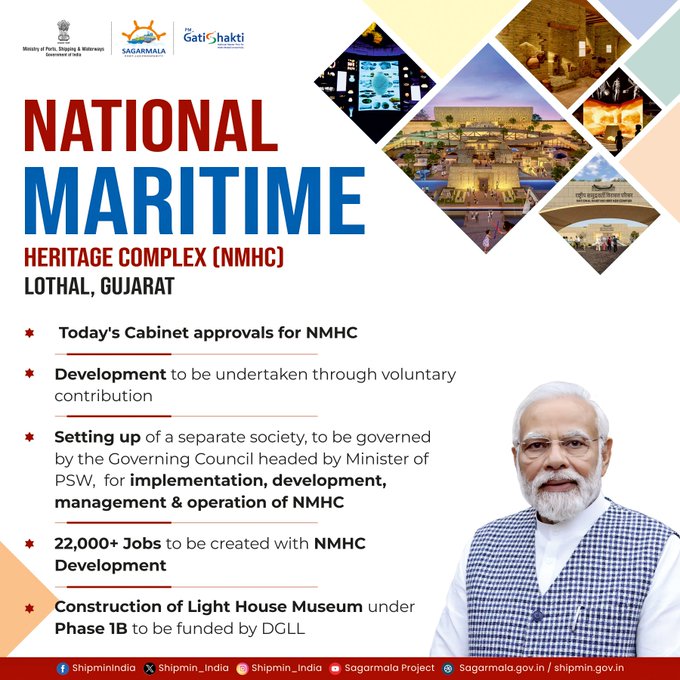
- 10 Oct 2024
In News:
The Union Cabinet has approved the development of NMHC in Lothal, Gujarat, under the Sagarmala programme.
- Purpose and Vision Aimed at showcasing India’s 4,500-year-old maritime heritage using an edutainment approach with modern technology.
Employment Generation
- Expected to create approximately 22,000 jobs: 15,000 direct and 7,000 indirect.
Project Phases
- Phase 1A
- Features a museum with 6 galleries, including:
- A large Indian Navy & Coast Guard gallery with external naval artifacts.
- Replica of Lothal township surrounded by an open aquatic gallery.
- A jetty walkway.
- Phase 1B
- Expansion includes:
- 8 additional galleries.
- The world's tallest Light House Museum.
- Bagicha complex with facilities for 1,500 cars, a food hall, and a medical center.
- Phase 2
- Development of Coastal States Pavilions by respective states and union territories.
- Hospitality zone featuring maritime-themed eco-resorts and museuotels.
- Recreation of ancient Lothal City and establishment of a Maritime Institute with hostel.
- Creation of four theme-based parks:
- Maritime & Naval Theme Park
- Climate Change Theme Park
- Monuments Park
- Adventure & Amusement Park
Governance and Management
- Governing Council
- Chaired by the Minister of Ports, Shipping & Waterways, overseeing project implementation and operation.
- Separate Society
- A dedicated society will manage future phases, governed under the Societies Registration Act, 1860.
Benefits and Funding
- Beneficiaries
- Local communities, tourists, researchers, government bodies, educational institutions, cultural organizations, conservation groups, and businesses.
- Funding
- Construction of the Light House Museum in Phase 1B will be financed by the Directorate General of Lighthouses and Lightships (DGLL).
Sagarmala Programme
- Objective
- A flagship initiative aiming to transform India’s maritime sector by enhancing logistics performance and fostering port-led development and coastal community upliftment.
- Background
- Approved in March 2015, the programme focuses on utilizing India’s extensive coastline and waterways for economic growth.
Status of Elephant in India 2022-23
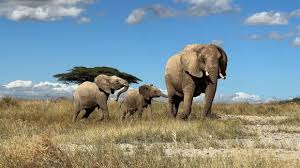
- 05 Oct 2024
In News:
- Shelved Census Report: The Environment Ministry has delayed the release of the elephant census report, “Status of Elephant in India 2022-23,” due to a lag in the Northeast census, with publication on hold until at least June 2025.
- Population Decline: Preliminary data from the report indicates significant drops in elephant populations across several regions:
- Southern West Bengal: 84% decline
- Jharkhand: 64% decline
- Odisha: 54% decline
- Kerala: 51% decline
- Developmental Threats: The report cites “mushrooming developmental projects,” including unregulated mining and infrastructure development, as major threats to elephant populations.
- Methodological Concerns: The Environment Ministry noted that refined counting methods could explain some discrepancies, suggesting new data may not be directly comparable to previous censuses conducted every five years since the 1990s.
- Old Counting Methods:
- Pre-2002: Elephants were counted using the “total direct count” method, which involved simple head counts but lacked scientific rigor for larger populations.
- 2002: Introduction of the “indirect dung count” method, where dung samples were used to estimate density based on decay rates.
- Sample Block Counts: Modified methods involved surveying limited areas (5 sq km) to improve detection accuracy.
- Elephants vs. Tigers: In 2021, a harmonized approach for estimating elephant and tiger populations was proposed, utilizing a similar block and co-variate methodology for both species.
- Genetic Mark-Recapture: The 2022-23 elephant census employed a genetic mark-recapture model using dung samples to identify individual elephants.
- Impact of Delay: Experts argue that withholding the available data hinders conservation efforts and governance. Delays could exacerbate the plight of elephant populations, particularly in regions facing specific threats, such as mining in Odisha.
Key Findings of the Unreleased Report:
- Overall Decline: The overall elephant population has decreased by 20% since 2017, with some areas reporting reductions of up to 41%.
- Regional Impact:
- Southern West Bengal, Jharkhand, and Odisha have seen losses of nearly 1,700 elephants.
- The Western Ghats region indicates an 18% decline.
- Northeast Region: The census for this area relies on extrapolated data from 2017, with approximately one-third of India's elephants located there.
- Contributing Factors: Habitat fragmentation, poaching, and human-elephant conflicts due to developmental activities are major threats.
- Conservation Recommendations: Strategies to strengthen elephant corridors, restore habitats, and enhance community involvement in conservation are vital.
- Challenges in the Northeast: Urban development, mining, and agriculture significantly threaten elephant movement and survival, underscoring the need for targeted conservation strategies.
- Conservation Status of Elephants in India:
- Leading States: Karnataka, Assam, and Kerala have the highest elephant populations.
- Conservation Status: Elephants are classified as Endangered on the IUCN Red List and are protected under multiple international conventions.
- Threats to Elephants:
- Habitat Loss: Rapid human population growth is diminishing elephant habitats.
- Fragmentation: Habitat disruption from construction and development projects is prevalent.
- Unlawful Killing: Human-elephant conflict often leads to retaliatory killings.
- Poaching: Targeting of male elephants for tusks continues to threaten genetic diversity.
- Conservation Measures:
- Financial support under various government schemes for habitat conservation and human-elephant conflict resolution.
- Establishment of 33 Elephant Reserves across 14 states.
- Collaborative efforts with railways and power departments to mitigate risks.
- Regular elephant census every five years by the Wildlife Institute of India (WII) for monitoring populations.
7 New Schemes to Boost Farmer Income
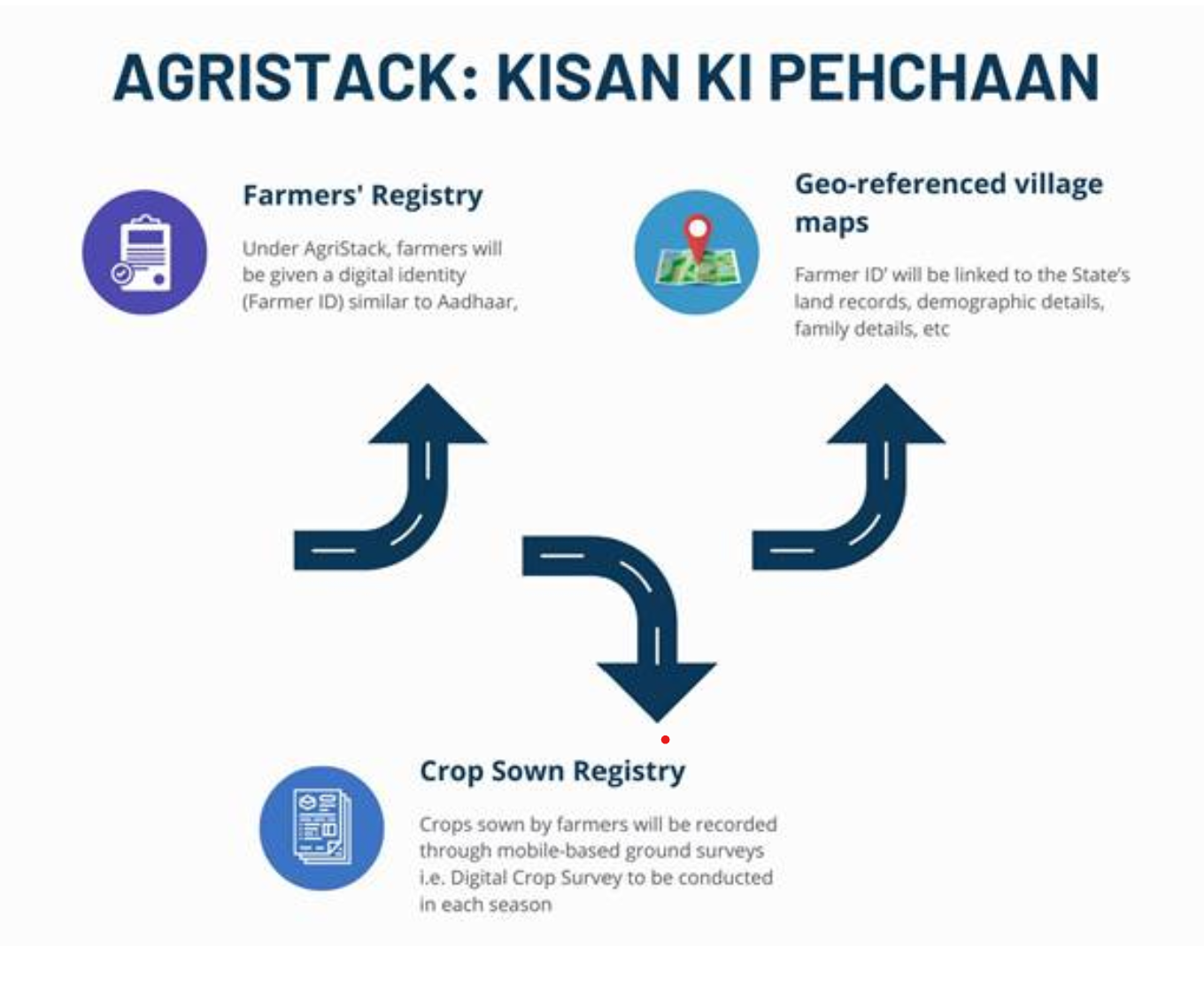
- 03 Sep 2024
In News:
The Union Cabinet chaired by Prime Minister, Shri Narendra Modi, approved seven schemes to improve farmers’ lives and increase their incomes at a total outlay of Rs 14,235.30 Crore.
1. Digital Agriculture Mission: based on the structure of Digital Public Infrastructure, Digital Agriculture Mission will use technology for improving farmers’ lives. The Mission has a total outlay of Rs 2,817 crores. It comprises two foundational pillars
1. Agri Stack
- Farmers registry
- Village land maps registry
- Crop Sown Registry
2. Krishi Decision Support System
- Geospatial data
- Drought/flood monitoring
- Weather/satellite data
- Groundwater/water availability data
- Modelling for crop yield and insurance
The Mission has provision for
- Soil profile
- Digital crop estimation
- Digital yield modelling
- Connect for crop loan
- Modern technologies like AI and Big Data
- Connect with buyers
- Bring new knowledge on mobile phones
2. Crop science for food and nutritional security: with a total outlay of Rs 3,979 crore. The initiative will prepare farmers for climate resilience and provide for food security by 2047. It has following pillars:
- Research and education
- Plant genetic resource management
- Genetic improvement for food and fodder crop
- Pulse and oilseed crop improvement
- Improvement of commercial crops
- Research on insects, microbes, pollinators etc.
3. Strengthening Agricultural Education, Management and Social Sciences: with a total outlay of Rs 2,291 Crore the measure will prepare agriculture students and researchers for current challenges and comprises the following
- Under Indian Council of Agri Research
- Modernising agri research and education
- In line with New Education Policy 2020
- Use latest technology … Digital DPI, AI, big data, remote, etc
- Include natural farming and climate resilience
4. Sustainable livestock health and production: with a total outlay of Rs 1,702 crore, the decision aims to Increase farmers income from livestock and dairy. It comprises the following
- Animal health management and veterinary education
- Dairy production and technology development
- Animal genetic resource management, production and improvement
- Animal nutrition and small ruminant production and development
5. Sustainable development of Horticulture: with a total outlay of Rs 1129.30 crore the measure is aimed at increasing farmers’ income from horticulture plants. It comprises the following
- Tropical, sub-tropical and temperate horticulture crops
- Root, tuber, bulbous and arid crops
- Vegetable, floriculture, and mushroom crops
- Plantation, spices, medicinal, and aromatic plants
6. Strengthening of Krishi Vigyan Kendra with an outlay of Rs 1,202 crore
7. Natural Resource Management with an outlay of Rs 1,115 crore
INDIA WATER WEEK (IWW) 2024
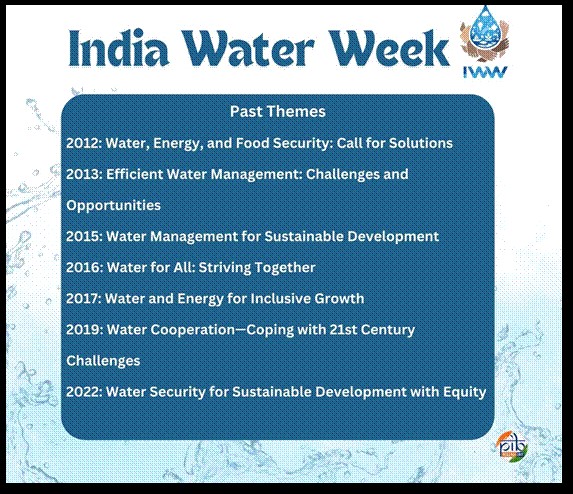
- 27 Sep 2024
In News:
- The 8th edition of India Water Week (IWW) 2024 was held from September 17-20, 2024, at the Bharat Mandapam in New Delhi.
- Organized by the Ministry of Jal Shakti, this prestigious international event has established itself as a key platform for collaboration in water resource management.
- With participation from global water experts, government leaders, and private-sector representatives, the event aimed to address the critical challenges of water management, foster innovation, and promote sustainable water practices.
Theme and Focus
The theme for India Water Week 2024 was "Partnerships and Cooperation for Inclusive Water Development and Management." This theme underscored the importance of cross-sectoral and international collaboration to address the 21st-century's growing water challenges and the need for integrated efforts in water conservation, management, and equitable access to water resources.
India Water Week: An International Forum
- Since its inception in 2012, India Water Week has grown into a pivotal event in global water diplomacy, offering a platform for dialogue, innovation, and knowledge sharing.
- Each edition focuses on a specific water-related issue, providing policymakers, experts, and industry leaders the opportunity to present solutions and explore cooperative strategies.
International WASH Conference
- A key highlight of IWW 2024 was the International WASH Conference, organized by the Department of Drinking Water and Sanitation (DDWS), Ministry of Jal Shakti.
- This conference focused on global collaboration in Water, Sanitation, and Hygiene (WASH), aiming to address pressing sanitation challenges and promote hygiene standards.
- The conference was held between 17th-19th September 2024, in New Delhi. This three-day gathering, centered on the theme ‘Sustaining Rural Water Supply’, offered a platform for knowledge exchange, showcasing innovations, and sharing best practices aimed at addressing global WASH challenges, with a special focus on achieving Sustainable Development Goal 6 (SDG 6).
Key Takeaways from India Water Week 2024
The India Water Week 2024 concluded with several important takeaways:
- Collaboration and Cooperation: Water security can only be achieved through partnerships across sectors and borders.
- Innovation in Water Management: Startups and technological innovations are key to addressing the future challenges of water resource management.
- Community Participation: Local communities play a crucial role in water conservation efforts, and their involvement is vital to achieving sustainable development.
- Policy Recommendations: The event produced several policy recommendations for sustainable water governance, addressing challenges in climate resilience, infrastructure development, and groundwater management.
Conclusion
India Water Week 2024 was a landmark event that brought together a diverse group of stakeholders to address the complexities of water management in the 21st century. The event paved the way for a more sustainable and inclusive approach to water development through partnership, cooperation, and innovation, ensuring equitable access to water resources for all.
PARAM Rudra Supercomputers
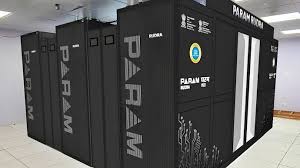
- 27 Sep 2024
In News:
Recently, the Prime Minister of India launched three Param Rudra Supercomputing Systems and a High-Performance Computing (HPC) system for weather and climate research via a virtual event.
PARAM Rudra Supercomputers
- Development: Indigenously developed under the National Supercomputing Mission.
- Deployment Locations:
- Delhi: Inter University Accelerator Centre (IUAC) focuses on material science and atomic physics.
- Pune: Giant Metre Radio Telescope (GMRT) will explore Fast Radio Bursts (FRBs) and other astronomical phenomena.
- Kolkata: S N Bose Centre drives advanced research in physics, cosmology, and earth sciences.
High-Performance Computing (HPC) System
- Purpose: Tailored for weather and climate research.
- Location:
- Indian Institute of Tropical Meteorology (IITM), Pune.
- National Center for Medium Range Weather Forecast (NCMRWF), Noida.
- System Names: 'Arka' and 'Arunika', reflecting their solar connection.
Significance of the HPC System
- Enhanced Predictive Capabilities:
- High-resolution models improve accuracy and lead time for: Tropical cyclones, Heavy precipitation, Thunderstorms, Hailstorms, Heat waves, Droughts and Other critical weather phenomena
National Supercomputing Mission (NSM)
- Launch and Goals
- Launched in 2015 to position India among world-class computing power nations.
- Aims to connect national academic and R&D institutions with a network of over 70 high-performance computing (HPC) facilities.
- Implementation
- Managed by the Department of Science and Technology (DST) and the Department of Electronics and Information Technology (DeitY), Government of India.
- Estimated cost: Rs 4,500 crore over 7 years.
- Supports initiatives like 'Digital India' and 'Make in India'.
- Current Status
- India ranks 74th globally in supercomputing, with only 9 supercomputers out of more than 500 worldwide.
- The mission addresses the growing computing demands of the scientific community and aligns with international technology trends.
- Infrastructure and Networking
- Envisions a supercomputing grid with over 70 HPC facilities networked via the National Knowledge Network (NKN).
- NKN connects academic institutions and R&D labs through a high-speed network.
INDIA’s FIRST MISSION TO VENUS
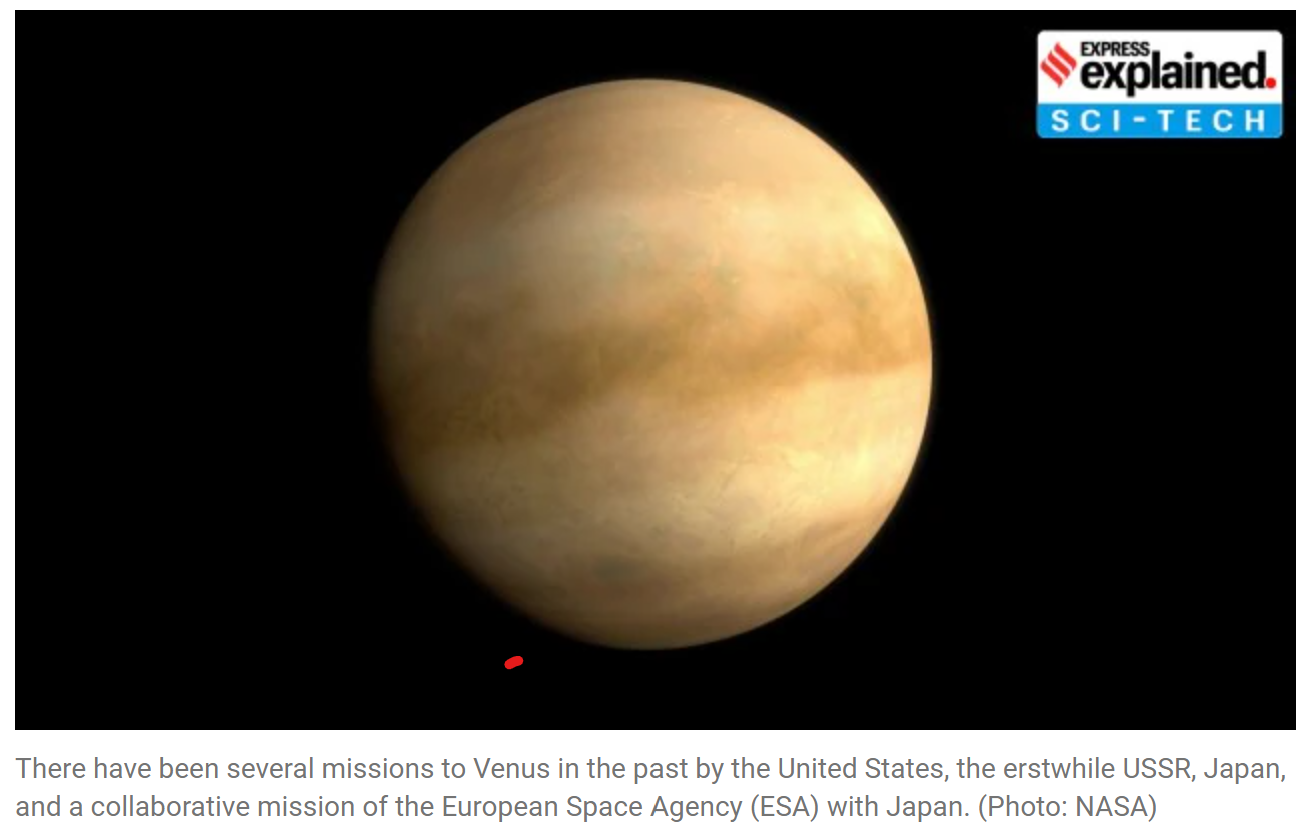
- 25 Sep 2024
In News:
India is set to launch its first mission to Venus in March 2028, following the recent approval from the Union Cabinet. This mission, led by the Indian Space Research Organisation (ISRO), marks India’s second interplanetary endeavor after the successful Mars Orbiter Mission in 2013.
Importance of Studying Venus
- Earth's Twin: Venus is often referred to as Earth’s twin due to its similar mass, density, and size. Understanding Venus can provide insights into Earth’s own evolution.
- Extreme Conditions: The planet has a surface temperature around 462°C and an atmospheric pressure similar to that found deep under Earth’s oceans. Its atmosphere consists primarily of 96.5% carbon dioxide and features clouds of sulfuric acid.
- Historical Water Presence: Venus may have had water in the past, leading scientists to explore how it transitioned to its current hostile environment, likely due to a runaway greenhouse effect.
Mission Overview
- Launch Timeline: The mission will utilize a strategic launch window when Earth and Venus are closest, occurring every 19 months. It was initially planned for 2023 but is now set for 2028.
- Payload: The mission will carry around 100 kg of scientific instruments, including 17 Indian and 7 international experiments.
- Journey to Venus: After exiting Earth's orbit, the spacecraft will take about 140 days to reach Venus.
Aero-Braking Technique
- First-time Use: This mission will employ aero-braking, a technique to adjust the spacecraft’s orbit by skimming through Venus's atmosphere, creating drag that reduces altitude.
- Target Orbit: The satellite will initially be in a highly elliptical orbit of 500 km x 60,000 km and will be gradually lowered to an orbit of either 300 x 300 km or 200 x 600 km over about six months.
Scientific Payloads
- Synthetic Aperture Radar: For imaging the surface of Venus.
- Thermal Camera: To study temperature variations.
- Interplanetary Dust Analysis: Investigating dust particle flow.
- High-Energy Particle Studies: Examining particles entering the atmosphere and their ionization effects.
- Atmospheric Composition Study: Assessing the structure, variability, and thermal state of Venus’s atmosphere.
Which countries are trying to study Venus?
- There have been several missions to Venus in the past by the United States, the erstwhile USSR, Japan, and a collaborative mission of the European Space Agency (ESA) with Japan.
- The US has planned at least two more missions to Venus in the future — DaVinci in 2029 and Veritas in 2031 — and the ESA has planned the EnVision mission for 2030.
INDIA ATTENDS IPEF MINISTERIAL MEETING
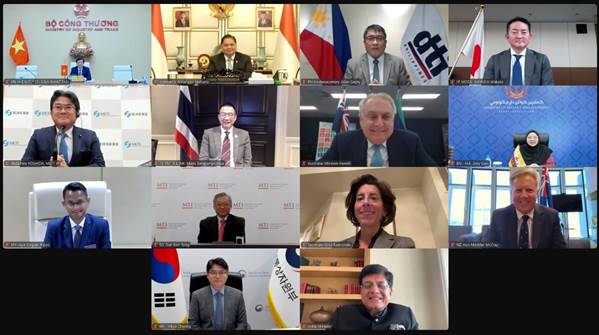
- 25 Sep 2024
In News:
Recently, the Union Commerce and Industry Minister Piyush Goyal joined a virtual meeting of the Indo-Pacific Economic Framework for Prosperity (IPEF) alongside representatives from 13 other partner countries. This meeting marked the third gathering focused on the framework's key pillars: Supply Chain Resilience, Clean Economy, and Fair Economy.
Key Agreements and Future Steps
- Entry into Force of Agreements:
- The IPEF partners celebrated the upcoming implementation of the Clean Economy Agreement and the Fair Economy Agreement on October 11 and October 12, 2024, respectively. These agreements aim to enhance economic cooperation and deliver tangible benefits to member nations.
- Supply Chain Resilience:
- The ministers discussed the progress in operationalizing the Supply Chain Agreement, emphasizing collaborative efforts to create more competitive and resilient supply chains. Key actions include:
- The formation of action plan teams for critical sectors like semiconductors, critical minerals, and chemicals, addressing vulnerabilities revealed during the COVID-19 pandemic.
- India's election as Vice Chair of the Supply Chain Council, which aims to streamline communication and cooperation among member countries.
- The ministers discussed the progress in operationalizing the Supply Chain Agreement, emphasizing collaborative efforts to create more competitive and resilient supply chains. Key actions include:
- Clean Economy Initiatives:
- The Clean Economy Agreement focuses on energy security, climate resilience, and reducing fossil fuel dependence. Ministers acknowledged the advancement of eight Cooperative Work Programs (CWPs) addressing topics such as hydrogen and carbon markets.
- The first IPEF Investor Forum, held in Singapore, facilitated discussions on investment opportunities in climate-friendly technologies.
- Fair Economy Measures:
- The Fair Economy Agreement aims to bolster anti-corruption measures and improve tax administration efficiency. Upcoming workshops will address foreign bribery laws and public procurement oversight.
- India highlighted its own anti-corruption measures and commitment to transparency under Prime Minister Modi's leadership.
About IPEF
Launched on May 23, 2022, in Tokyo, IPEF includes 14 countries: Australia, Brunei, Fiji, India, Indonesia, Japan, South Korea, Malaysia, New Zealand, Philippines, Singapore, Thailand, Vietnam, and the USA. The framework seeks to enhance economic engagement, stability, and prosperity across the Indo-Pacific region through its four key pillars: Trade, Supply Chain Resilience, Clean Economy, and Fair Economy.
SPICED SCHEME
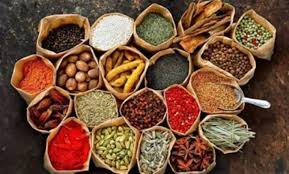
- 25 Sep 2024
In the News
The Union Ministry of Commerce and Industry has authorized the SPICED scheme (Sustainability in Spice Sector through Progressive, Innovative, and Collaborative Interventions for Export Development), which will run until 2025-26.
Overview
This initiative aims to expand the cultivation area and enhance the productivity of both small and large cardamom. It will also focus on improving the quality of spices for export through advancements in post-harvest processes and promoting value-added spice exports.
Key Objectives:
- Increase cardamom production and boost export potential.
- Improve post-harvest quality to meet export standards and ensure compliance with safety and quality regulations.
India holds the position of the largest producer, consumer, and exporter of spices globally.
Cardamom
Cardamom is sourced from the seeds of the Elettaria cardamomum plant (commonly known as green or true cardamom) and is a member of the ginger family. It is known for its unique, robust flavor that combines both spicy and sweet notes. There are two primary varieties: Small Cardamom and Large Cardamom.
Small Cardamom:
- Origin: Native to the evergreen forests of South India's Western Ghats.
- Major Producers: Primarily grown in Kerala, Karnataka, and Tamil Nadu.
- Growing Conditions: Thrives in loamy soil with thick shade, requires temperatures between 10°C and 35°C, and needs 1500 to 4000 mm of annual rainfall.
Large Cardamom:
- Distribution: Mainly cultivated in the Sub-Himalayan regions of Northeast India, Nepal, and Bhutan.
- Major Producers: Key production areas include Sikkim, Arunachal Pradesh, and the Darjeeling district of West Bengal.
- Growing Conditions: Prefers high altitudes (600 to 2000 meters), with average rainfall of 3000-3500 mm, and temperatures ranging from 6°C to 30°C. Well-drained, loamy soils rich in organic matter are ideal.
About the Spices Board of India
Established in 1987 under the Ministry of Commerce and Industry, the Spices Board of India serves as the apex organization for the promotion and export of a diverse array of spices, including black pepper, both small and large cardamom, ginger, turmeric, cinnamon, cumin, and fenugreek. The Board was formed by merging the Cardamom Board (1968) and the Spices Export Promotion Council (1960). Its headquarters is located in Kochi, Kerala.
SWACHH BHARAT MISSION 2.0
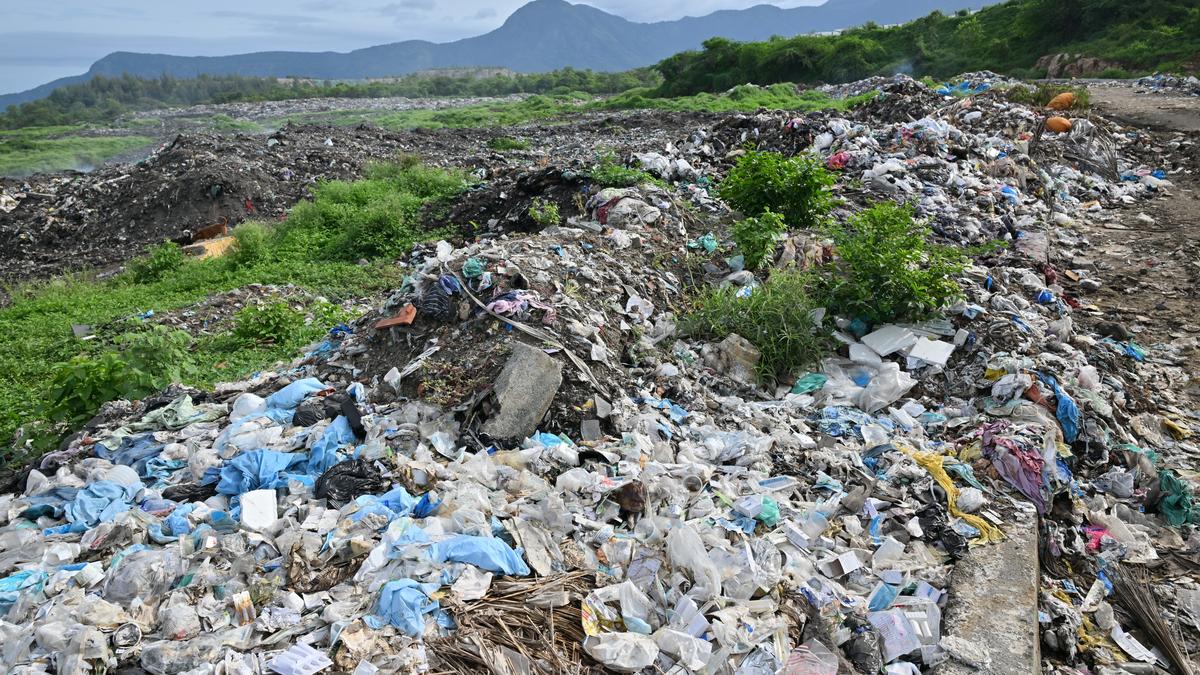
- 24 Sep 2024
Mission Overview:
- Launched on October 1, 2021, as the second phase of the Swachh Bharat Mission.
- Aims for "Garbage-Free Status" in all urban areas by 2026.
- Focuses on 100% source segregation, door-to-door waste collection, and scientific waste management.
Legacy Waste Issues:
- Legacy waste consists of improperly collected and stored solid waste, often found in landfills and abandoned sites.
- Approximately 15,000 acres of prime land are buried under nearly 16 crore tonnes of legacy waste in India.
- The mission seeks to convert legacy dumpsites into green zones and establish scientific landfills to manage untreated waste.
Current Progress:
- Of 2,424 identified dumpsites (each with over 1,000 tonnes of waste), only 470 have been fully remediated (16% reclaimed).
- 1,224 sites are under ongoing remediation, while 730 remain untouched.
- Out of 28,460 acres of affected land, 4,552 acres have been reclaimed, with 23,908 acres still to be addressed.
State Performance:
- Tamil Nadu: 837 acres reclaimed (42% of its total dumpsite area).
- Gujarat: Leads in percentage, reclaiming 75% of its landfill area (698 out of 938 acres).
Financial Aspects:
- Central assistance of ?3,226 crore has been approved for remediation efforts.
- States and Union Territories must provide a matching share to access these funds.
Challenges:
- Legacy waste management involves complexities such as radiological characterization, leachate management, and fire control.
- Current municipal solid waste generation in India is around 150,000 tonnes per day.
Historical Context:
- The original Swachh Bharat Mission (SBM-U 1.0) launched on October 2, 2014, focused on making urban areas Open Defecation Free (ODF).
GREENLAND LANDSLIDE AND GLOBAL SEISMIC WAVES

- 24 Sep 2024
In News:
Massive Greenland landslide sent seismic waves around earth for 9 days. One year ago, roughly 25 million cubic metres of ice and rock splashed into the Dickson Fjord in Greenland and displaced the water enough to give rise to a 200-metre high mega-tsunami; in this way, a melting glacier led to a planet-wide tremor, and researchers warn that it may not be the last
Seismic Observations
- Detection: Unusual seismic signals recorded by stations worldwide, characterized by a single frequency, unlike typical earthquake vibrations.
- Classification: Initially termed a "USO" (unidentified seismic object) due to its atypical properties.
- Duration: Waves persisted for nine days, unlike typical aftershock patterns.
Investigation Efforts
- Collaboration: Involved over 68 researchers from 40 universities across 15 countries.
- Data Sources: Combined seismic data, satellite imagery, water level monitors, and a classified bathymetric map from the Danish Navy.
- Conclusion: The seismic waves resulted from a massive landslide caused by the collapse of Hvide Støvhorn peak, which triggered a series of events leading to the tsunami.
Mega-Tsunami and Seiche
- Tsunami Details:
- Created by the avalanche crashing into the fjord, displacing water significantly.
- Resulted in waves that reflected off fjord walls, reaching heights of nearly 110 meters due to the fjord's unique shape.
- Seiche Phenomenon:
- Oscillations in the fjord persisted for over nine days, reflecting the energy from the landslide.
- Maximum amplitude of the seiche recorded at 7.4 meters, with a frequency of 11.45 MHz.
Climate Context
- Global Warming Impact: Thinning glaciers contributed to instability in the region, making such landslides more likely.
- Future Predictions: Researchers warn of increased frequency and scale of similar events as climate change continues to affect Arctic and subarctic regions.
Key Takeaways
- The Greenland landslide serves as a reminder of the unpredictable consequences of climate change, including massive geological events.
- The incident highlights the interconnectedness of natural systems and the potential for localized events to have global repercussions.
ROBOTIC MULES AND HIGH-ALTITUDE INNOVATIONS IN THE ARMY
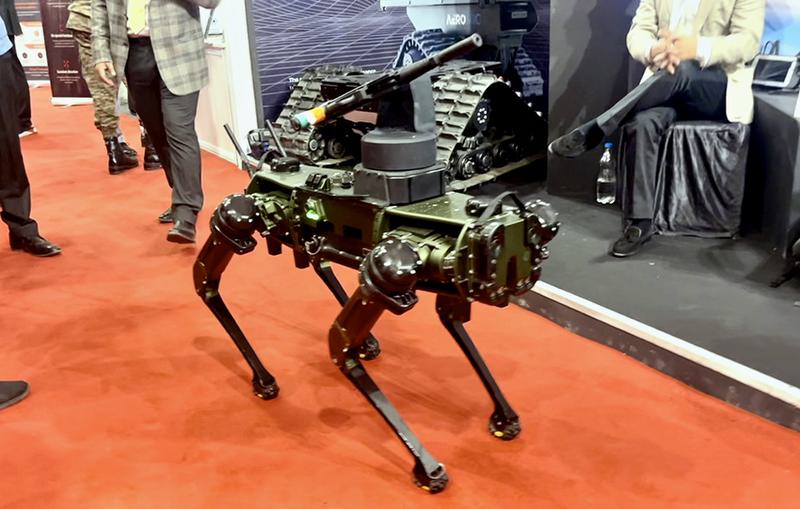
- 24 Sep 2024
In News:
The Army has inducted 100 robotic mules, known as Multi-Utility Legged Equipment (MULE), under the fourth tranche of emergency procurements (EP).
- Purpose: These robotic mules are designed for surveillance and transporting light loads across challenging terrains, especially in high-altitude areas.
- Specifications:
- Endurance: Capable of operating for up to three years.
- Temperature Range: Functions effectively in extreme temperatures from -40°C to +55°C.
- Payload Capacity: Can carry up to 15 kg.
- Mobility: Can climb stairs, steep hills, and traverse obstacles; waterproof and able to cross rivers.
- Sensing Abilities: Equipped with electro-optics and infrared capabilities for object recognition.
- Control Mechanisms: Operable via an easy-to-use remote control, Wi-Fi, or Long-Term Evolution (LTE) connections.
- Mission Programming: Can be programmed for specific missions using waypoints or pre-recorded tasks.
- Combat Integration: Capable of integration with small arms for military applications.
- Logistics Drones: Logistics drones are currently undergoing trials to enhance support and movement in forward areas, particularly in high-altitude conditions.
- High-Altitude Habitat Evaluation: A new tent designed for extreme cold environments (operating at temperatures down to -40°C) is under evaluation. This tent, called Peak Pods, is intended for use in sub-zero conditions.
- Evaluation Locations: The tent has been tested in three high-altitude sites:
- Leh (11,500 feet)
- Daulat Beg Oldie (16,700 feet)
- Durbuk (12,500 feet)
- Significance: These advancements reflect the Army's focus on technological innovations to enhance operational capabilities in high-altitude areas, especially following the 2020 stand-off with China in Eastern Ladakh.
- Funding and Timelines: The EP process allows contracts up to ?300 crore, with a requirement for delivery within one year.
GINGEE FORT PROPOSED FOR UNESCO WORLD HERITAGE SITE
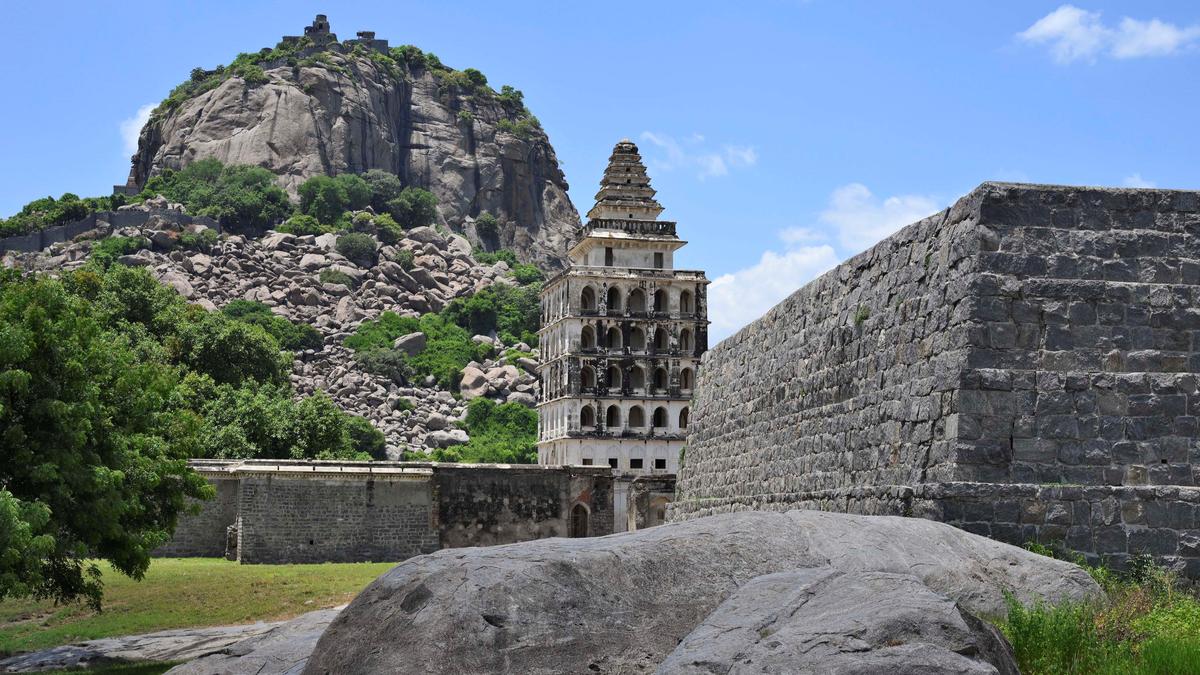
- 24 Sep 2024
In News:
Recently nominated for UNESCO’s World Heritage Site status, Gingee Fort is part of the Maratha Military Landscapes of India, which encompasses 12 historical sites, primarily located in Maharashtra, with Gingee being the sole representative from Tamil Nadu. The nomination highlights the fort’s historical importance, unique military architecture, and its integral role in Maratha military history.
Significance of Gingee Fort
Gingee Fort, often referred to as the "Troy of the East," stands as a crucial historical monument in Tamil Nadu. Perched atop three prominent hillocks—Rajagiri, Krishnagiri, and Chandragiri—it has served as a significant stronghold for numerous empires throughout Indian history, including the Vijayanagar Nayaks, Marathas, Mughals, French, and British. This fortification exemplifies India’s rich and diverse historical legacy.
Unique Features
The fort complex spans 11 acres and boasts an array of significant structures, including:
- Kalyana Mahal: An eight-storey royal residence.
- Durbar Hall: A ceremonial hall for gatherings.
- Stepped Well and Cannon: Examples of advanced engineering and military use.
- Clock Tower and Armory: Reflecting its historical military significance.
- Elephant Tank and Stables: Indicating its use for royal elephants.
- Temples and Mosques: Including the Venkataramana Temple with intricate carvings and the Sadathtulla Mosque.
Additionally, the fort features advanced water supply systems from various historical periods, ensuring adequate resources for its inhabitants.
Historical Timeline
The origins of Gingee Fort trace back to 1200 CE when built by Ananta Kon of the Konar Dynasty. The fort underwent significant renovations under the Vijayanagar Empire. Key historical events include:
- 1677: Captured by Chhatrapati Shivaji, it remained under Maratha control until 1698.
- 1698: Came under Mughal possession, later ruled by the Nawabs of Arcot and briefly by the French.
- 1750-1770: Occupied by the French before falling to the British.
This timeline reflects the fort's strategic and cultural significance across different dynasties.
Nomination Process for UNESCO
The process for securing UNESCO World Heritage Site status involves rigorous evaluation. Experts from UNESCO and the International Council on Monuments and Sites (ICOMOS) assess the site's historical significance, conservation state, and management strategies. A visit to Gingee Fort is scheduled as part of this evaluation, with a recommendation expected for the 2025 World Heritage designation.
Preparation of the Nomination Dossier
The Development and Research Organisation for Nature, Arts and Heritage (DRONAH) prepared the nomination dossier, aligning with UNESCO’s operational guidelines. This comprehensive document details the fort's historical context, conservation status, and management strategies, aimed at demonstrating its outstanding value for humanity.
SUPREME COURT RULING ON CHILD SEXUAL EXPLOITATIVE MATERIAL: KEY HIGHLIGHTS

- 24 Sep 2024
Overview of the Ruling
- Date: Recent ruling by the Supreme Court of India.
- Context: Determined that viewing, downloading, storing, or distributing material involving child sexual exploitation constitutes a criminal offense under the POCSO Act and the Information Technology Act.
- Appeal Background: Decision overturned a Madras High Court ruling that deemed private viewing of such material non-criminal.
Terminology and Legislative Recommendations
- Terminology Change: Supreme Court advocates replacing “child pornography” with “Child Sexual Exploitative and Abuse Material” (CSEAM) to avoid trivialization of the crime.
- Amendment Call: Court urged Parliament to amend the POCSO Act and advised promulgating an ordinance for immediate effect.
Key Highlights of the Ruling
- Redefinition of Terminology: Emphasizes that "pornography" may imply consensual acts, misrepresenting the nature of child exploitation.
- Expansion of Section 15 of the POCSO Act:
- Possession Without Reporting: Individuals must delete or report any stored CSEAM; failure results in penalties.
- Intent to Transmit: Possessing CSEAM with intent to share, barring reporting, is punishable.
- Commercial Possession: Storing CSEAM for commercial purposes faces the strictest penalties.
- Concept of Inchoate Offenses: Classifies offenses related to CSEAM as preparatory actions towards further crimes.
- Redefinition of Possession:
- Includes "constructive possession," where individuals can be liable without direct physical possession.
- Watching CSEAM online without downloading can still be deemed possession.
- Educational Reforms:
- Court urged for comprehensive sex education to counter stigma and misconceptions.
- Curriculum should cover consent, healthy relationships, and respect for diversity.
- Awareness of the POCSO Act: Central and state governments are mandated to promote awareness, supported by the National Commission for Protection of Child Rights (NCPCR).
- Formation of Expert Committee: To develop programs for health and sex education while increasing POCSO awareness among children.
- Victim Support and Awareness: Emphasized the need for psychological support, counseling, and educational assistance for victims.
Status of Crimes Against Children
- Increasing Incidents: India leads in online child sexual abuse imagery, with 25,000 uploads reported from April to August 2024.
- Geographical Distribution: Major uploads identified in Delhi, Maharashtra, Gujarat, Uttar Pradesh, and West Bengal.
- Rising Cases: From 331 cases in 2017 to 781 in 2018, with 1,171 cases of inappropriate content dissemination reported in 2022.
Overview of the POCSO Act
- Purpose: Addresses sexual exploitation and abuse of children, defining a child as anyone under 18.
- Features:
- Gender-Neutral: Recognizes that both genders can be victims.
- Victim Confidentiality: Mandates protection of victims’ identities.
- Mandatory Reporting: Requires reporting of suspected abuse.
Gaps in Implementation
- Support Persons: Lack of designated support persons for victims; 96% of cases showed inadequate support during legal processes.
- POCSO Courts: Only 408 designated courts across 28 states as of 2022, leading to access issues.
- Special Prosecutors: Shortage of trained public prosecutors for POCSO cases.
Conclusion
- Call for Collaboration: Emphasizes the need for a coordinated approach involving educators, healthcare providers, and law enforcement to combat child sexual exploitation.
- Societal Responsibility: A shift in societal attitudes is essential for preventing victimization and ensuring recovery for victims.
QUAD CANCER MOONSHOT
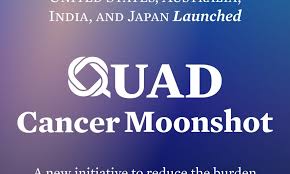
- 23 Sep 2024
In News:
The Quad Cancer Moonshot Initiative is a significant collaborative effort among the Quad countries—India, the United States, Australia, and Japan—aimed at combating cancer through innovative strategies. The initiative focuses on key areas such as preventing and detecting cancer, improving treatment, and alleviating the disease's impact on patients and families.
Key Highlights of the Quad Cancer Moonshot Initiative:
- Focus Areas:
- Cervical Cancer Screening: Enhancing access to screening programs.
- HPV Vaccination: Increasing vaccination rates against HPV, which is the leading cause of cervical cancer.
- Patient Treatment: Improving treatment protocols and accessibility for cancer patients.
- India’s Contributions:
- Financial Commitment: India has pledged $10 million to support the WHO’s Global Initiative on Digital Health, aimed at enhancing digital health technologies for cancer care in the Indo-Pacific region.
- Material Support: India will provide cervical cancer screening kits, detection tools, and HPV vaccines valued at $7.5 million to bolster healthcare initiatives in the region.
- AI-based Protocols: Development of AI-driven treatment protocols to improve care delivery for cancer patients.
- Capacity Building: India aims to enhance radiotherapy services and overall cancer prevention strategies in the Indo-Pacific.
This initiative represents a strong commitment to fostering international collaboration in healthcare, particularly in the prevention and treatment of cervical cancer. By empowering communities with accessible tools and resources, the Quad countries aim to significantly reduce the burden of cancer in the region.
AMUR FALCONS
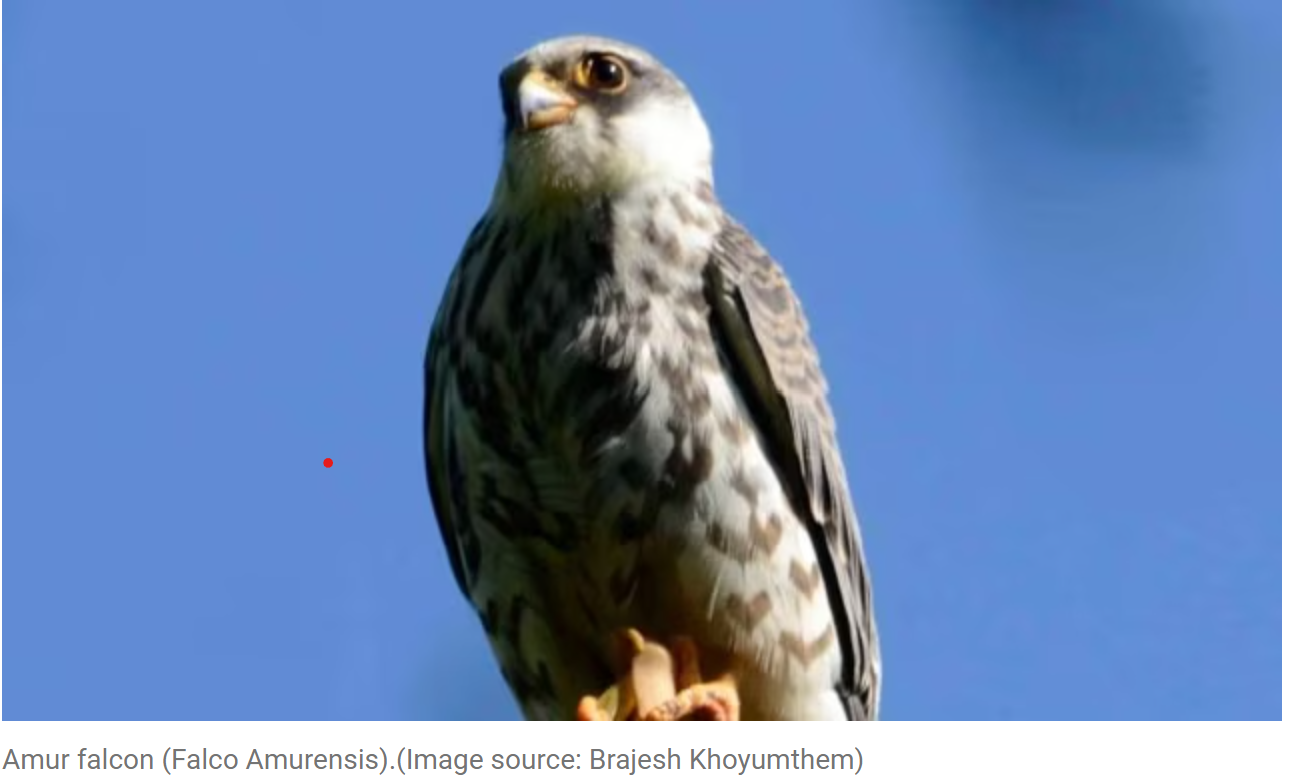
- 22 Sep 2024
In News:
An order issued by the District Magistrate directed the owners of air guns to deposit their hunting weapons at the offices of respective village authorities.
Amur Falcons: An Overview
Scientific Classification:
- Common Name: Amur Falcon
- Scientific Name: Falco amurensis
- Family: Falconidae
Physical Characteristics:
- Size: Small raptors, approximately 28-30 cm in length.
- Distinctive Features: Dark plumage with white wing linings; reddish-orange eyes and feet.
Migration Patterns:
- Breeding Grounds: Southeastern Russia and northern China.
- Migratory Route: They leave their breeding areas in autumn, traveling south to round the Himalayas, stopping in Nagaland, and then heading towards the Western Ghats before crossing the Indian Ocean to reach South Africa.
- Distance: These falcons undertake an incredible journey of around 22,000 kilometers annually, making them one of the most remarkable long-distance migrants among raptors.
Diet:
- Primarily insectivorous, they also consume small vertebrates when available.
Conservation Status:
- IUCN Status: Least Concern
- Legal Protection:
- Wildlife Protection Act, 1972: Schedule IV
- Convention on Migratory Species (CMS): Appendix II
Recent Conservation Efforts:
- Ban in Manipur: The Tamenglong district administration has imposed a ban on hunting, catching, killing, and selling Amur falcons in preparation for their migratory arrival.
- Tagging Program: In 2016, radio transmitters were used to monitor their migration routes.
- Awareness Initiatives: An annual ‘Amur Falcon Festival’ in Tamenglong district promotes awareness and celebrates these migratory birds.
Threats:
- Amur falcons face various threats including habitat loss, hunting, and illegal trapping.
Cultural Significance:
- Locally known as ‘Kahuaipuina’ in Manipur and ‘Molulem’ in Nagaland, these birds hold ecological and cultural significance, particularly in regions that serve as critical stopover points during migration.
Summary
The Amur falcon is a small but remarkable migratory raptor known for its long-distance travels from its breeding grounds in Asia to Africa. Conservation efforts in India, particularly in the Tamenglong district of Manipur, aim to protect these birds from hunting and habitat loss, ensuring their continued survival and highlighting their importance in the ecosystem.
QUAD GROUPING
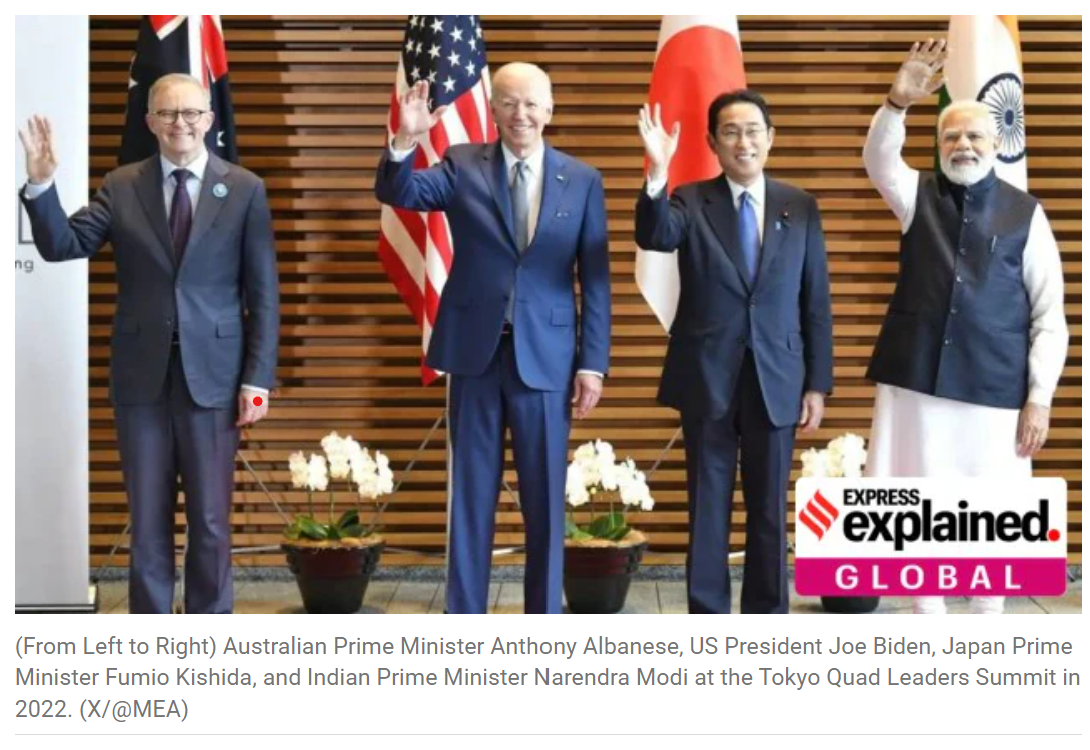
- 22 Sep 2024
In News:
Prime Minister Narendra Modi arrived in the United States, where he will participate in the fourth Quad Leaders Summit in Wilmington, Delaware.
What is the Quad Grouping?
The Quad, or Quadrilateral Security Dialogue, is an informal strategic alliance comprising India, the United States, Japan, and Australia. Originally formed in response to the Indian Ocean tsunami in 2004, the Quad aims to foster collaboration in various areas, but its primary focus has become countering the influence of China in the Indo-Pacific region.
Historical Background
- 2004: The Quad began as a response to the Indian Ocean tsunami, facilitating disaster relief.
- 2007: Japanese PM Shinzo Abe formalized the alliance.
- 2017: Amid rising Chinese assertiveness, the Quad was revitalized, expanding its objectives beyond maritime security.
Structure and Characteristics
- The Quad is not a formal organization; it lacks a secretariat or permanent decision-making body like the EU or UN.
- It focuses on strengthening bilateral and multilateral ties among member nations.
- Unlike NATO, the Quad does not include collective defense provisions but conducts joint military exercises to demonstrate unity.
Key Developments
- In 2020, the Malabar naval exercises expanded to include Australia, marking the first joint military exercises of the Quad since its resurgence.
- The first in-person summit took place in Washington, D.C. in 2021.
Objectives of the Quad
The Quad has outlined several primary objectives:
- Maritime Security: Ensuring safe and open sea routes in the Indo-Pacific.
- Climate Change: Addressing environmental challenges collaboratively.
- Investment Ecosystem: Creating opportunities for economic investment in the region.
- Technological Innovation: Promoting advancements and cooperation in technology.
- Public Health: Collaborating on initiatives like vaccine diplomacy during the COVID-19 pandemic.
Expansion and Future Directions
The Quad members have discussed expanding the partnership to include countries like South Korea, New Zealand, and Vietnam. In a joint statement, they reaffirmed their commitment to a free, open, resilient, and inclusive Indo-Pacific governed by international law.
Challenges and Opposition
China views the Quad as an effort to encircle and contain its influence. Beijing has criticized the grouping, labeling it as a strategy that incites discord among Asian nations.
45TH CHESS OLYMPIAD
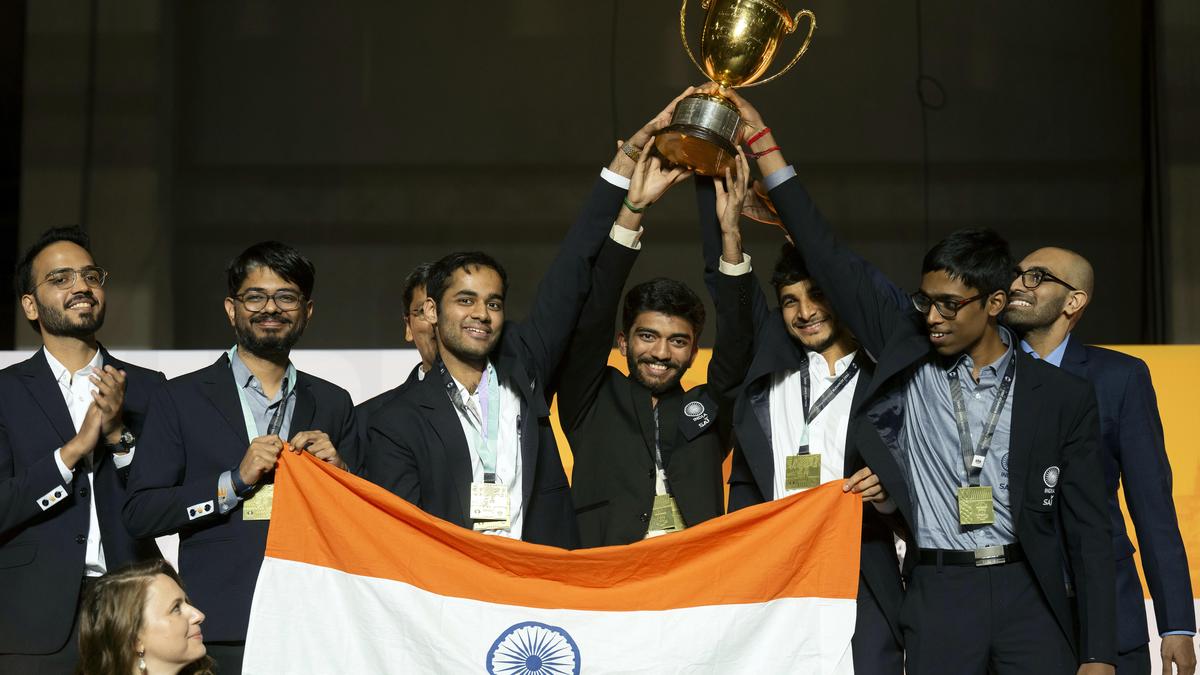
- 22 Sep 2024
In News:
Recently, both the Indian men's and women's chess teams achieved remarkable success by winning gold medals at the Chess Olympiad in Budapest.
- In the final round of the 45th Chess Olympiad, the Indian men's team triumphed over Slovenia with a score of 3.5-0.5.
- At the same time, the Indian women's team showcased their skills by defeating Azerbaijan with the same score of 3.5-0.5.
- With this victory, India joins an elite group, as only China and the former Soviet Union had previously managed to win both men's and women's gold medals in the same Chess Olympiad edition.
- The Indian men's team had previously claimed bronze medals in 2014 and 2022.
- Meanwhile, the Indian women's team secured a bronze medal in the 2022 tournament held in Chennai.
About the Chess Olympiad:
- This prestigious event occurs every two years and features national teams from around the globe. It is organized by FIDE, which also selects the host nation.
- The inaugural Olympiad, which was unofficial, took place in 1924.
100 Years of the Discovery of the Indus Civilization
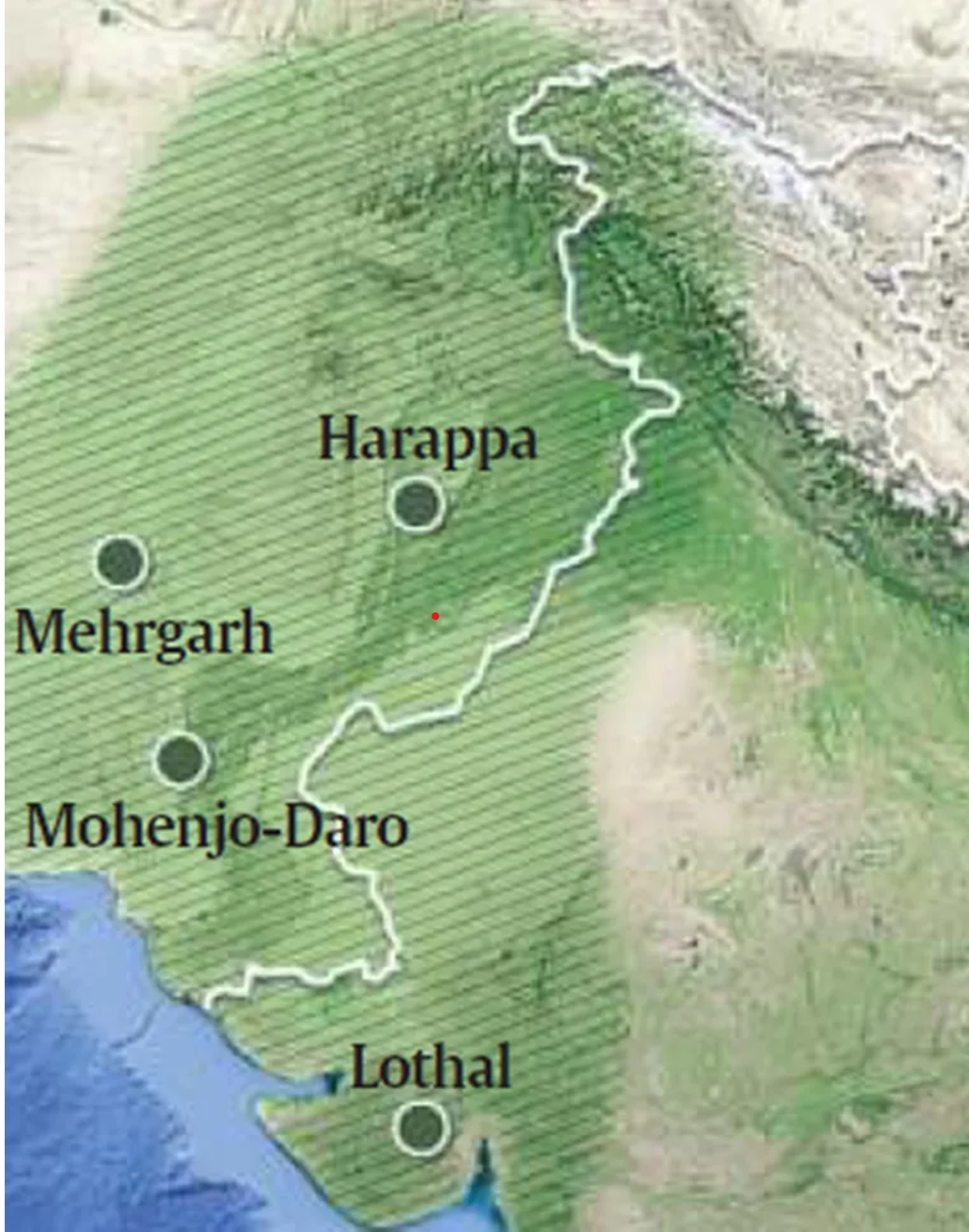
- 22 Sep 2024
Introduction
The centenary of the announcement of the Indus Valley Civilization (IVC) by Sir John Marshall on September 20, 1924, marks a significant milestone in archaeological history. This civilization, known for its advanced urban planning, encompasses over 2,000 sites across India, Pakistan, and Afghanistan.
Historical Context
Discovery of the Indus Civilization
- John Marshall's Role: As the Director-General of the Archaeological Survey of India (ASI), Marshall played a pivotal role in the excavations of Harappa and Mohenjodaro.
- Initial Findings: The civilization was revealed through meticulous work over two decades, beginning with Marshall's initial interest in the antiquities of India.
The Process of Discovery
The Concept of 'The Slow Hunch'
- Definition: Inspired by Steven Johnson's idea of 'the slow hunch,' this concept highlights how insights develop over time, similar to Joseph Priestley's early experiments with oxygen.
- Application to Marshall: Marshall's initial curiosity about the antiquity of India was nurtured through years of observations and explorations, culminating in the excavation of Harappa in 1921.
Key Individuals Involved
- Daya Ram Sahni: Conducted the first excavations at Harappa, uncovering evidence of an ancient culture.
- Rakhaldas Banerji: Excavated Mohenjodaro in 1922, leading to significant discoveries that indicated a widespread civilization.
Institutional Challenges
Limitations within ASI
- Lack of Collaboration: The ASI lacked a platform for archaeologists to share insights, impeding a collaborative approach to discoveries.
- Marshall's Focus: His dedication to ongoing projects, particularly at Taxila, resulted in delays in recognizing the significance of findings at Harappa and Mohenjodaro.
Announcing the Discovery
Marshall's Publication
- Impactful Presentation: In September 1924, Marshall's article vividly described the architectural and cultural features of the Indus Civilization, captivating readers.
- Scholarly Reception: The discovery sparked immediate scholarly interest, leading to further inquiries into the civilization's connections with ancient Mesopotamia.
Characteristics of the Harappan Civilization
Overview
- Timeframe: Flourished around 2500 BCE, classified as a Bronze-age civilization.
- Major Sites: Notable locations include Harappa, Mohenjodaro, and Lothal.
Key Features
- Urban Planning: Cities featured grid layouts, advanced drainage systems, and distinct public and private spaces.
- Agriculture and Economy: The economy thrived on agriculture, trade, and crafts, with evidence of cotton production and extensive trade networks.
Religious Practices
- Deities and Symbols: Terracotta figurines and seals indicate worship of fertility deities and animal figures, suggesting a rich spiritual life.
Reasons for Decline
Theories of Collapse
- Environmental Changes: Shifts in rainfall and tectonic activity may have disrupted agriculture and led to resource scarcity.
- Invasion Theories: While some suggest Indo-European invasions, evidence of cultural continuity challenges this narrative.
Recent Initiatives
Preservation and Promotion
- National Maritime Heritage Complex: Development at Lothal aims to highlight maritime history and attract tourism.
- UNESCO Recognition: Dholavira was added to the World Heritage list in 2021, showcasing the importance of IVC sites.
EXERCISE AIKYA
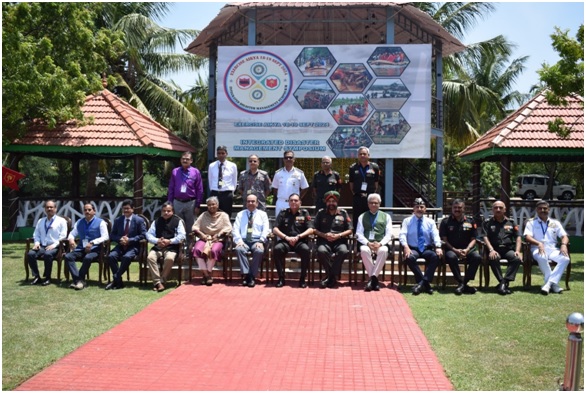
- 21 Sep 2024
In News:
The National Disaster Management Authority (NDMA), in partnership with the Indian Army's Southern Command and the Tamil Nadu State Disaster Management Authority (TNSDMA), recently conducted "EXERCISE AIKYA" in Chennai. This two-day Integrated Symposium and Table Top Exercise (TTEx) aimed to bolster disaster preparedness and response among key stakeholders across Peninsular India.
Key Highlights:
- Objective: "Aikya," meaning "Oneness" in Tamil, sought to unify India’s disaster management community by enhancing collaboration and preparedness.
- Participants: The exercise involved representatives from:
- Six southern states/UTs: Tamil Nadu, Kerala, Karnataka, Andhra Pradesh, Telangana, and Puducherry.
- Central ministries related to disaster management.
- State Disaster Management Authorities (SDMAs).
- Armed forces, including the Indian Army, Navy, and Air Force.
- Response agencies such as the NDRF, Indian Coast Guard, CRPF, CISF, and Railways.
- Early warning agencies including the IMD, NRSC, INCOIS, CWC, and FSI.
- Research institutions like NIDM, NIOT, IIT Madras, and DAE, with Prof. CVR Murty of IIT Madras serving as the Exercise Mentor.
- Focus Areas: The exercise simulated various emergency situations, covering:
- Tsunamis, landslides, floods, cyclones, industrial incidents, and forest fires.
- Recent disaster events in Tamil Nadu, Wayanad, and Andhra Pradesh.
- Discussions: Participants engaged in discussions about:
- Leveraging technology and AI for disaster management.
- Economic impacts of disasters.
- Vulnerabilities specific to the Peninsular region.
- Strategies for improving response times.
Future Plans
"EXERCISE AIKYA" marks a crucial step towards strengthening India’s disaster management framework. The NDMA and the Southern Command plan to conduct similar exercises with other military commands and institutions, including the Army War College and Naval War College, to further enhance national disaster preparedness and response capabilities.
EUROPA CLIPPER MISSION
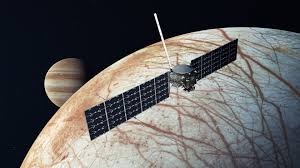
- 21 Sep 2024
In news:
NASA is preparing to launch the Europa Clipper mission, which aims to investigate Jupiter's icy moon, Europa.
Key Details:
- Objective: This mission will place a spacecraft in orbit around Jupiter to conduct a thorough study of Europa, focusing on its potential habitability.
- Significance: Europa Clipper will be NASA's first mission specifically designed to explore an ocean world beyond Earth. Europa is believed to have a subsurface ocean beneath its icy surface, which raises the possibility of supporting life.
- Spacecraft Specifications:
- The spacecraft measures 100 feet (30.5 meters) from end to end and 58 feet (17.6 meters) across, making it the largest NASA spacecraft ever built for a planetary mission.
- Mission Plan:
- Europa Clipper will orbit Jupiter and conduct 49 close flybys of Europa to gather critical data regarding its environment and potential habitability.
- Instrumentation:
- Equipped with nine scientific instruments and a gravity experiment that leverages its telecommunications system, the spacecraft will maximize data collection by operating all instruments simultaneously during each flyby. This approach will allow scientists to compile comprehensive data layers, creating an in-depth understanding of Europa.
- Power Source:
- The spacecraft is outfitted with large solar arrays to harness sunlight for its energy needs while operating in the challenging environment of the Jupiter system.
Solar Array
A solar array is a collection of solar panels interconnected to generate electrical power. When combined with other components like an inverter and battery, it forms a complete solar energy system.
GLOBAL CYBERSECURITY INDEX 2024
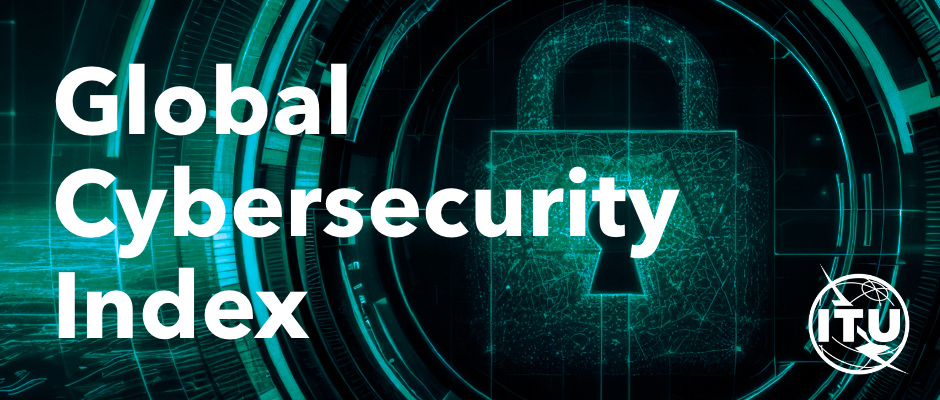
- 21 Sep 2024
In News:
- India has achieved Tier 1 status in the Global Cybersecurity Index (GCI) 2024, published by the International Telecommunication Union (ITU), with an impressive score of 98.49 out of 100.
Role-Modeling Country: This accomplishment places India among ‘role-modeling’ countries, reflecting a strong commitment to cybersecurity practices globally.
Assessment Criteria: The GCI 2024 evaluates national efforts based on five pillars:
-
- Legal Measures
- Technical Measures
- Organizational Measures
- Capacity Development
- Cooperation
- Evaluation Methodology: The index utilized a comprehensive questionnaire comprising 83 questions, which cover 20 indicators, 64 sub-indicators, and 28 micro-indicators, ensuring a thorough assessment of each country's cybersecurity landscape.
- Tier Classification: The GCI 2024 report categorized 46 countries in Tier 1, the highest tier, indicating a strong commitment across all five cybersecurity pillars. Most countries fall into lower tiers, either “establishing” (Tier 3) or “evolving” (Tier 4) their cybersecurity frameworks.
Key Achievements
- Global Standing: India ranks at the top level of global cybersecurity rankings, showcasing its dedication to enhancing cyber resilience and securing its digital infrastructure.
- Government Initiatives:
- Robust Frameworks: Establishment of comprehensive frameworks for cybersecurity and cybercrime laws.
- Sectoral Support: Implementation of Sectoral Computer Incident Response Teams (CSIRTs) that provide technical support and incident reporting across various industries.
- Educational Integration: Cybersecurity has been integrated into primary and secondary education curricula to foster informed digital citizens.
- Public Awareness: Targeted campaigns have promoted secure online practices across multiple sectors, including private industry and academia.
- Skill Development and Innovation: The government has provided incentives and grants to enhance skill development and promote research within the cybersecurity sector.
- International Collaborations: India has engaged in numerous bilateral and multilateral partnerships to strengthen its capacity-building and information-sharing efforts.
About the International Telecommunication Union (ITU)
- Overview: Established in 1865, the ITU is the United Nations specialized agency for information and communication technologies, becoming a UN agency in 1947.
- Membership: ITU has 193 member countries and over 1,000 associated organizations, including companies and universities.
- Functions: ITU coordinates global radio spectrum allocation, sets technical standards for telecommunication, and works to improve ICT access in underserved communities.
- India's Involvement: India has been an active ITU member since 1869 and a regular participant in the ITU Council since 1952.
INDIA JOINS THE INTERNATIONAL BIG CAT ALLIANCE (IBCA)
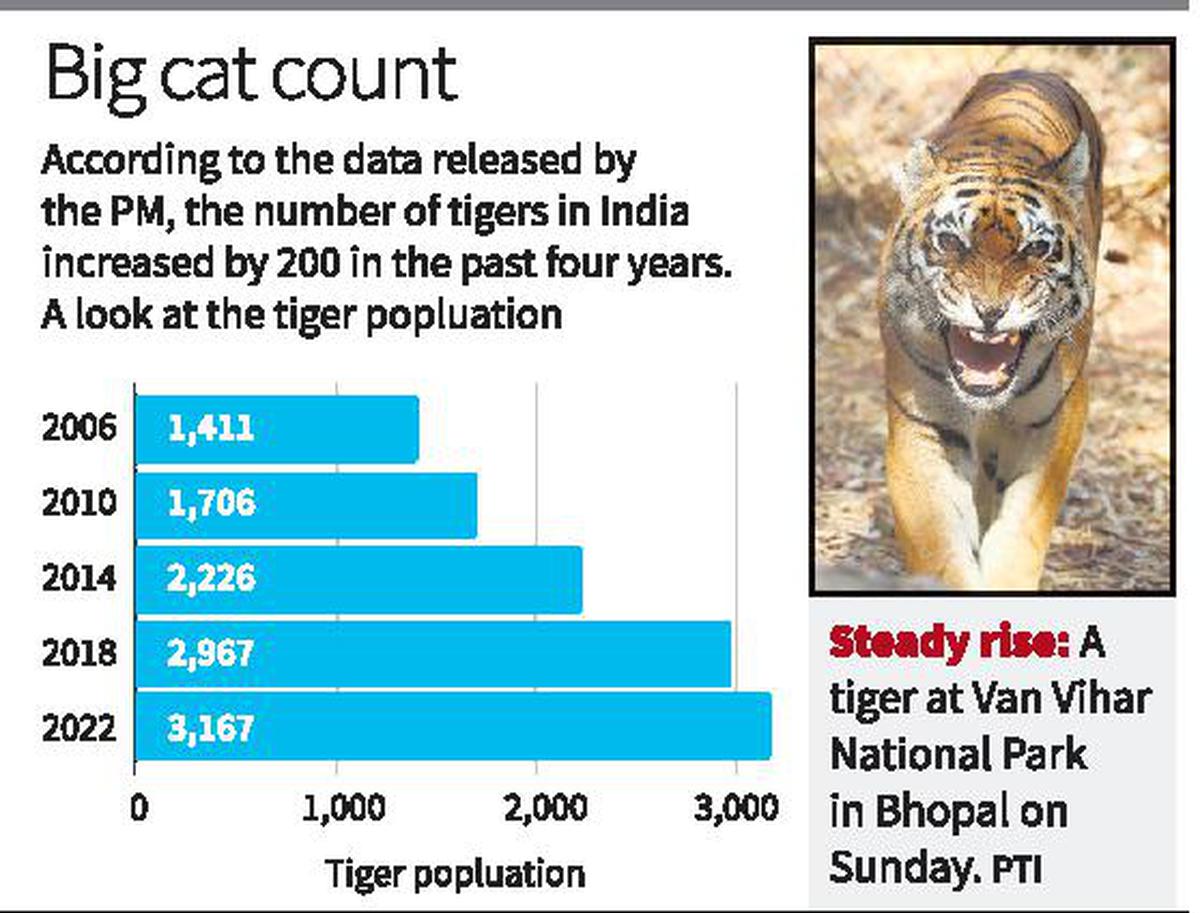
- 21 Sep 2024
In News:
India formally joined the International Big Cat Alliance (IBCA), launched by Prime Minister Narendra Modi on April 9, 2023, during the 50th anniversary of Project Tiger.
- Objective: The IBCA aims to conserve the world's seven big cat species: tiger, lion, leopard, snow leopard, cheetah, jaguar, and puma, focusing on their protection and natural habitats.
- Founding Members: India joins Nicaragua, Eswatini, and Somalia as founding members of the IBCA, which will collaborate with 24 countries and nine organizations.
- Headquarters: The IBCA will be headquartered in India, facilitating efforts to protect big cats and their ecosystems.
Purpose and Goals of IBCA
- Conservation Focus: The alliance addresses common challenges in the protection of the seven big cats, promoting sustainable resource use and tackling climate change.
- Collaboration and Support: The IBCA will provide a platform for member nations to share knowledge, expertise, and support recovery efforts in potential habitats.
- Mobilization of Resources: The alliance aims to mobilize financial and technical resources for effective conservation strategies based on global experiences.
Background and Evolution
- Inception: PM Modi proposed an international initiative against poaching and illegal wildlife trade in 2019, advocating for collaboration among tiger range countries.
- Extension of Project Tiger: The IBCA serves as an extension of India's long-standing commitment to wildlife protection, initially exemplified by the launch of Project Tiger in 1973.
Big Cat Species Overview
- Tiger (Endangered)
- Population: Approx. 3,167 in India, accounting for over 75% of the global population.
- Threats: Habitat loss, poaching, and climate change impacting their territory.
- Lion (Vulnerable)
- Population: Estimated 700 in India.
- Threats: Habitat reduction and targeted poaching.
- Leopard (Near Threatened)
- Population: Around 13,000 in India, with approximately 250,000 globally.
- Threats: Habitat loss and human-wildlife conflict.
- Snow Leopard (Vulnerable)
- Population: 400-700 in India, with global estimates of 4,000-6,500.
- Threats: Poaching, habitat loss, and human disturbances.
- Cheetah (Vulnerable)
- Population: Declined to less than 7,000 globally; declared extinct in India in 1952.
- Threats: Habitat loss, climate change, and illegal trafficking.
- Jaguar (Near Threatened)
- Population: Approximately 173,000 globally, primarily in South America.
- Threats: Deforestation, illegal hunting, and habitat fragmentation.
- Puma (Near Threatened)
- Population: Estimated 50,000, experiencing a decline.
- Threats: Habitat loss and human-wildlife conflict.
Future Initiatives
- Translocation Efforts: Following successful cheetah translocations from Namibia and South Africa, India plans to explore similar initiatives for other big cats.
- Global Cooperation: The IBCA will strengthen conservation efforts by working with a broader network of range countries to combat poaching and promote habitat preservation.
PRADHAN MANTRI JANJATIYA UNNAT GRAM ABHIYAN
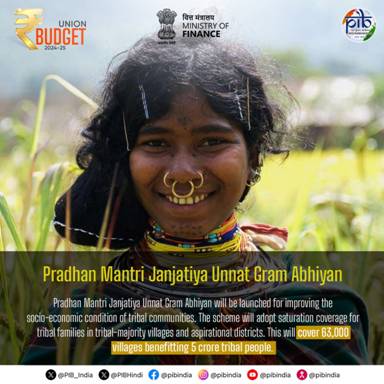
- 20 Sep 2024
In News:
The Union Cabinet, chaired by Prime Minister Narendra Modi, approved the Pradhan Mantri Janjatiya Unnat Gram Abhiyan. This mission aims to enhance the socio-economic conditions of tribal communities by saturating more than 63,000 tribal-majority villages and aspirational districts with a total budget of ?79,156 crore.
Budget Breakdown
- Total Outlay: ?79,156 crore
- Central Share: ?56,333 crore
- State Share: ?22,823 crore
Target Beneficiaries
The initiative is expected to benefit over 5 crore tribal people across 549 districts and 2,740 blocks in 30 States/UTs.
Context
- India's Scheduled Tribe (ST) population stands at 10.45 crore, according to the 2011 Census, with more than 705 tribal communities often residing in remote areas. This mission builds upon the successes of the Pradhan Mantri Janjati Adivasi Nyaya Maha Abhiyan (PM-JANMAN), launched on November 15, 2023.
Mission Objectives
- The mission aims to address critical gaps in social infrastructure, health, education, and livelihood through a comprehensive approach involving 25 interventions across 17 ministries.
Key Goals and Interventions
Goal 1: Developing Enabling Infrastructure
- Housing: Provision of pucca houses under the PMAY (Gramin) for eligible households, along with access to tapped water and electricity.
- Village Infrastructure: Improvement of all-weather road connectivity, mobile connectivity, and educational and health infrastructure.
Goal 2: Promotion of Economic Empowerment
- Skill Development: Enhanced training and self-employment opportunities for ST youth through initiatives like the Skill India Mission and support for tribal marketing.
Goal 3: Universal Access to Good Education
- Education Initiatives: Increase the gross enrollment ratio in schools and higher education, along with setting up tribal hostels for students.
Goal 4: Healthy Lives and Dignified Ageing
- Health Access: Provision of quality health facilities, aiming to meet national standards in maternal and child health indicators through mobile medical units.
Innovative Schemes
- Tribal Home Stay Initiative: Promotion of 1,000 homestays in tribal areas to boost tourism and provide alternate livelihoods. Each household can receive up to ?5 lakh for construction and ?3 lakh for renovations.
- Sustainable Livelihood for FRA Holders: Focus on 22 lakh FRA patta holders, enhancing their rights and providing livelihood support through various government schemes.
- Improving Educational Infrastructure: Upgrading tribal residential schools and hostels to improve local educational resources and retention rates.
- Sickle Cell Disease Management: Establishing Centers of Competence for affordable diagnostic services and prenatal care in regions where the disease is prevalent.
- Tribal Multipurpose Marketing Centres (TMMCs): Setting up 100 TMMCs to improve marketing of tribal products and facilitate better prices for producers.
One Nation, One Election
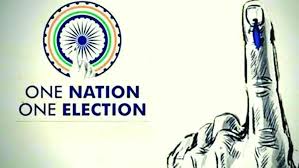
- 19 Sep 2024
In News:
The Union cabinet has recently approved the "One Nation, One Election" proposal, facilitating the conduct of simultaneous elections in India. This initiative follows a report submitted in March by a high-level committee chaired by former President Ram Nath Kovind, which unanimously recommended synchronizing Lok Sabha and State Assembly elections, along with local body polls, within 100 days.
What are Simultaneous Polls?
Simultaneous polls aim to align the timing of Lok Sabha and State Assembly elections across all states, thereby reducing the frequency of elections. Historically, simultaneous elections were held during the first four general election cycles (1952, 1957, 1962, and 1967), but this practice ended in 1959 after the dismissal of the Kerala government. Since then, due to premature dissolutions of various Assemblies, elections have been staggered. Currently, only four states—Andhra Pradesh, Odisha, Arunachal Pradesh, and Sikkim—hold simultaneous elections with the Lok Sabha.
Arguments For and Against
Proponents argue that simultaneous elections can significantly reduce election-related costs, which amounted to approximately ?3,870 crore during the 2014 general elections. They also highlight that the Model Code of Conduct triggers twice in a five-year cycle, leading to extended periods of governance downtime.
Opponents caution that this approach may favor larger political parties with national reach, potentially sidelining smaller regional parties. A 2015 study found that the likelihood of a party winning both Lok Sabha and Assembly elections when held simultaneously is 77%, dropping to 61% if elections are spaced six months apart.
Implementation Process
The committee proposed a two-step implementation:
- Simultaneous Elections: Conduct elections for both the Lok Sabha and State Legislative Assemblies together.
- Synchronizing Local Elections: Hold elections for municipalities and panchayats within 100 days following the general elections.
Following the announcement of the "appointed date," the terms of all State Assemblies constituted after that date would end with the Lok Sabha's term. This could lead to most State governments not completing their five-year terms, even if they maintain a majority.
Required Constitutional Changes
Several amendments to the Constitution have been proposed:
- Introduction of Article 82A: This would require all Legislative Assemblies elected after the appointed date to conclude with the Lok Sabha’s term.
- Amendment of Article 327: Expanding Parliament's powers to include the conduct of simultaneous elections.
- Revisions to Articles 83 and 172: Defining the five-year term as the "full term" and any remaining period after premature dissolution as the "unexpired term."
- Introduction of Article 324A: Empowering Parliament to ensure that municipality and panchayat elections occur alongside general elections.
- Amendments for Union Territories: Ensuring that Assembly elections in Union Territories align with simultaneous elections.
- Single Electoral Roll: Proposing a common electoral roll for all elections, to be managed by the Election Commission of India (ECI).
State Ratification
Under Article 368, amending the Constitution may require ratification by state legislatures. The panel believes that syncing Assembly elections with Lok Sabha elections will not need state ratification, but amendments for a common electoral roll and synchronization of local elections will require cooperation from the states. The ruling BJP, currently in power in several states, will need to navigate upcoming Assembly elections in Haryana, Maharashtra, and Jharkhand to secure this support.
Conclusion
The "One Nation, One Election" initiative aims to streamline India's electoral process, potentially enhancing governance and reducing costs. However, its success depends on achieving political consensus and implementing necessary constitutional amendments, which will require collaboration among various political parties and state governments.
Cabinet approves Chandrayaan-4 mission, first module of Bharatiya Antariksh Station, Venus mission, next-gen launcher
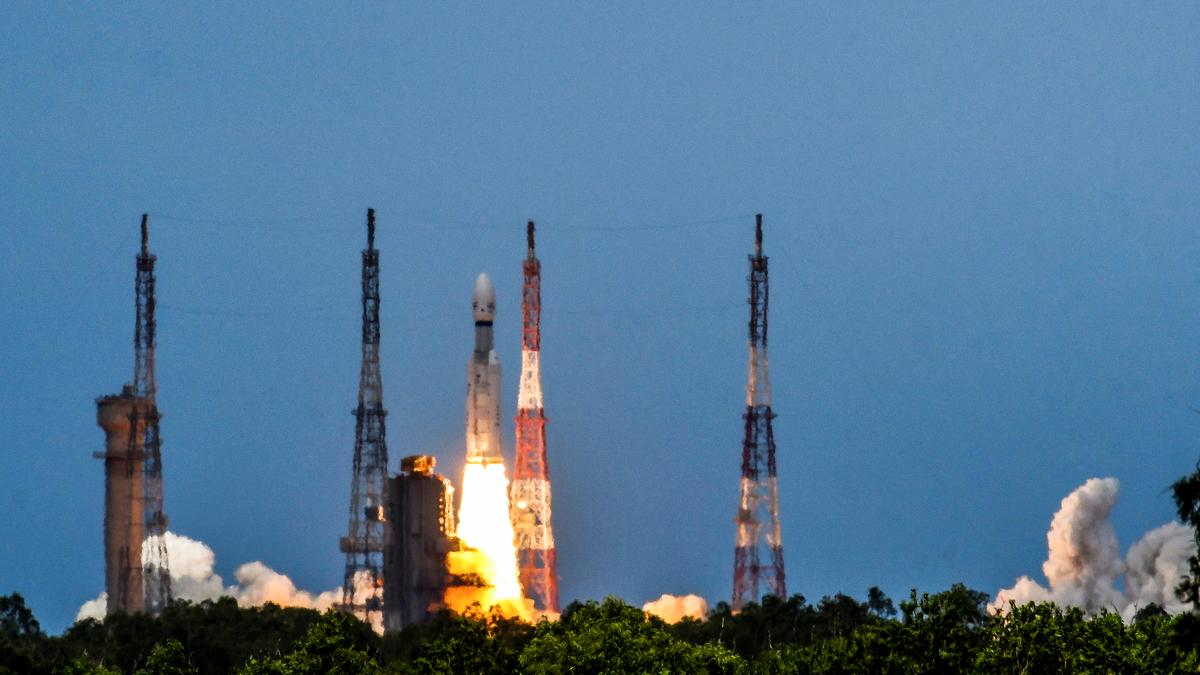
- 19 Sep 2024
In News:
The PM Modi-led Union Cabinet has approved several ambitious space initiatives, marking a significant leap for India's lunar and space exploration programs.
Chandrayaan-4 Mission
- Objective: The fourth lunar mission aims to collect lunar samples, return them safely to Earth, and analyze them.
- Timeline: Expected completion within 36 months post-approval, with a budget of ?2,104 crore.
- Significance: This mission will build foundational technological capabilities for a manned Moon landing planned by 2040.
- Remarks: ISRO Chairman S. Somanath emphasized that the mission's highlight is its low-cost execution and the step-by-step approach to developing the necessary technology.
Bharatiya Antariksh Station (BAS) and Gaganyaan
- BAS Development: Approval for the first module of the Bharatiya Antariksh Station, targeted for launch by 2028, with full completion by 2035.
- Gaganyaan Program: The program’s budget has been revised to ?20,193 crore, with an additional funding of ?11,170 crore to enhance its scope and include precursor missions for BAS.
- Mission Plan: Eight missions are envisaged by 2028, including four under the ongoing Gaganyaan program, development of BAS-1, and four additional missions for technology demonstration and validation.
Venus Orbiter Mission (VOM)
- Launch Timeline: Scheduled for March 2028, VOM will explore Venus's atmosphere, geology, and generate extensive scientific data.
- Budget: The Cabinet approved ?1,236 crore for VOM, with ?824 crore allocated for the spacecraft.
- Research Focus: The mission will provide insights into Venus's transformation and how different planetary environments evolve.
Next-Generation Launch Vehicle (NGLV)
- Development Approval: A reusable NGLV has been greenlit with a budget of ?8,240 crore.
- Capabilities: The new rocket will have three times the payload lifting capability compared to existing vehicles (10 tonnes to 30 tonnes to Low Earth Orbit) and will be cost-effective and commercially viable.
- Features: The NGLV will include reusability options and modular green propulsion systems, enhancing India's capacity for satellite launches.
Net Direct Tax inflows increase by 16.1%

- 19 Sep 2024
In News:
- Advance tax payments from corporates and personal taxpayers have risen by 22.6%, surpassing ?4.36 lakh crore. This increase is driven by a 39.2% rise in Personal Income Tax (PIT) receipts and an 18.2% uptick in corporate taxes.
Key Details:
- Overall net direct tax receipts have reached approximately ?9.96 lakh crore, reflecting a 16.1% increase, though this marks a slowdown from the 22.5% growth recorded as of August 11.
- As of September 17, corporate tax collections grew by 10.5%, while inflows from PIT increased by 18.9%.
- Securities Transaction Tax collections nearly doubled to ?26,154 crore, and refunds surged by 56.5% to ?2.05 lakh crore, according to data from the Income Tax Department.
- Personal taxes continue to outpace corporate taxes, contributing 51.7% of net direct tax receipts for the year.
- Gross tax collections, before accounting for refunds, have risen by 21.5%, totaling ?12.01 lakh crore.
Pradhan Mantri Annadata Aay Sanrakshan Abhiyan (PM-AASHA)

- 19 Sep 2024
In News:
- The Union Cabinet, chaired by Prime Minister Narendra Modi, approved the continuation of the PM-AASHA scheme to provide remunerative prices to farmers and control price volatility of essential commodities for consumers.
- Total Financial Outlay: ?35,000 crore during the 15th Finance Commission Cycle, up to 2025-26.
Scheme Integration
- The government has merged the Price Support Scheme (PSS) and Price Stabilization Fund (PSF) into PM-AASHA to enhance efficiency.
- Components of PM-AASHA:
- Price Support Scheme (PSS)
- Price Stabilization Fund (PSF)
- Price Deficit Payment Scheme (PDPS)
- Market Intervention Scheme (MIS)
Procurement Details
- MSP Procurement: Starting from the 2024-25 season, procurement of notified pulses, oilseeds, and copra at Minimum Support Price (MSP) will be on 25% of national production.
- Exceptions for 2024-25: 100% procurement of Tur, Urad, and Masur will be implemented.
- Government Guarantee: The existing government guarantee for procurement has been enhanced to ?45,000 crore.
Consumer Protection Measures
- The extension of the PSF scheme will help protect consumers from extreme price volatility by maintaining strategic buffer stocks of pulses and onions.
- Procurement of pulses at market prices will be handled by the Department of Consumer Affairs (DoCA) when prices exceed MSP.
Enhanced State Participation
- PDPS Coverage: The coverage for the Price Deficit Payment Scheme for notified oilseeds has been increased from 25% to 40% of state production.
- Implementation Period: Extended from 3 months to 4 months, with compensation limited to 15% of MSP.
Market Intervention Scheme (MIS) Adjustments
- The MIS has been extended to provide remunerative prices for perishable horticultural crops.
- Coverage for MIS has increased from 20% to 25% of production, with an option for direct differential payments to farmers.
- For TOP (Tomato, Onion, Potato) crops, the government will cover transportation and storage costs to ensure price stability.
Fast-track special courts (FTSCs)
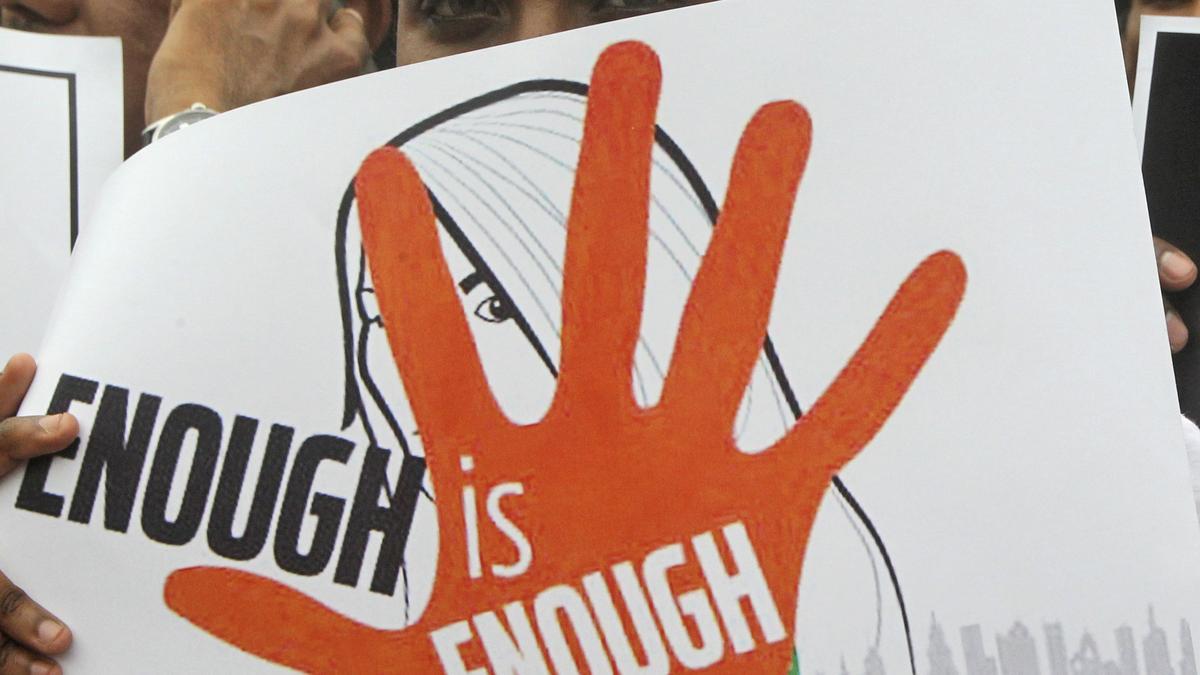
- 19 Sep 2024
In News:
Fast-track special courts (FTSCs) are much more efficient than other courts in handling rape cases and those related to the Protection of Children from Sexual Offences (POCSO) Act, a report released by the India Child Protection.
Key Details:
West Bengal's Performance
- West Bengal recorded less than a 2% disposal rate for rape and POCSO cases, the lowest in India.
- Only five out of 123 earmarked FTSCs are currently functioning in the state.
Overview of the India Child Protection (ICP)
- Established in 2005, the ICP is dedicated to combatting child sexual abuse and related crimes, including:
- Child trafficking
- Exploitation of children in the digital space
- Child marriage
Efficiency of FTSCs
- The ICP report titled "Fast Tracking Justice" highlighted that FTSCs disposed of 83% of cases in 2022, compared to 10% by conventional courts.
- As of August 2023, 755 out of 1,023 earmarked FTSCs were operational.
- Among these, 410 FTSCs are exclusively for POCSO cases.
Historical Context
- The FTSC scheme was launched by the Centre in October 2019, following a Supreme Court directive for ensuring the swift disposal of cases, related to rape and those coming under the Protection of Children from Sexual Offences (POCSO) Act.
- It is a centrally sponsored scheme.
- Implemented by the Department of Justice, Ministry of Law and Justice.
Case Disposal Statistics
- FTSCs have disposed of 52% of the 4,16,638 rape and POCSO cases since the scheme's inception.
- Disposal rates improved from 83% in 2022 to 94% in 2023.
State-wise Disposal Rates
- Top Performing States:
- Maharashtra: 79.5%
- Punjab: 71.3%
- Kerala (Southern India): 69.5%
- Karnataka: 62.2%
- Tamil Nadu: 58.4%
- Lowest Performing States:
- West Bengal: 1.6%
- Jammu and Kashmir: 25%
- Meghalaya: 26.6%
- Delhi: 28.3%
Note: No data was available for Arunachal Pradesh, Ladakh, and Sikkim.
Need for Additional FTSCs
- The ICP report states that India needs at least 1,000 more FTSCs to manage the backlog effectively.
- The backlog of pending cases rose from 2,81,049 in 2020 to 4,17,673 by the end of 2022.
Advocacy for Reform
- Bhuwan Ribhu, a child rights activist, emphasized the urgent need for FTSCs to ensure justice for victims:
- Investment in the safety and security of women and children is crucial.
- All pending cases should be resolved within the next three years.
- Rehabilitation and compensation for victims should be prioritized.
- Time-bound policies for case disposal across all courts are necessary.
Funding and Resource Utilization
- The ICP report recommends optimizing the Nirbhaya Fund, created after the 2012 Delhi gang rape, to support additional FTSCs.
- There is currently ?1,700 crore unutilized, while the requirement for operationalizing new FTSCs is ?1,302 crore.
Strategic Clean Energy Partnership (SCEP)
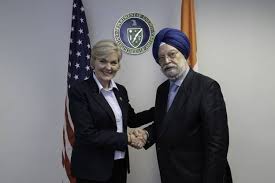
- 18 Sep 2024
In News
The recent Strategic Clean Energy Partnership (SCEP) Ministerial between the United States and India aimed to enhance collaboration in clean energy innovation, energy security, and the transition to clean energy.
About the Partnership
The meeting reviewed significant achievements and future initiatives across five core pillars:
- Power and Energy Efficiency
- Responsible Oil and Gas
- Renewable Energy
- Emerging Fuels & Technologies
- Sustainable Growth
The SCEP facilitates bilateral cooperation on clean energy, focusing on power, efficiency, renewable resources, emerging technologies, and sustainable practices.
Key Highlights of SCEP
Renewable Energy Technology Action Platform (RETAP)
Launched in August 2023, RETAP aims to create actionable roadmaps for:
- Hydrogen
- Long-duration energy storage
- Offshore wind
- Geothermal technologies
Energy Storage Task Force
This public-private initiative seeks to address:
- Policy
- Safety
- Regulatory challenges
It explores alternatives to lithium-ion technologies, with projects like Battery Energy Storage Systems (BESS) in Assam and Haryana focusing on grid integration and renewable energy storage.
Modernization of Power Distribution
The meeting underscored India’s advancements in:
- Smart metering
- Power market reforms
- The Indian Railways’ goal of achieving net-zero emissions by 2030
India has successfully procured 1.5 GW of round-the-clock renewable energy.
Sustainable Aviation Fuel (SAF) & Transport Electrification
A comprehensive workshop was launched to enhance R&D, certification, and partnerships for SAF. India’s PM eBus Sewa scheme aims to deploy 10,000 electric buses, promoting electrification in medium and heavy-duty transport.
Carbon Capture, Utilization, and Storage (CCUS) & Methane Abatement
Cooperation on CCUS technologies and regulatory frameworks has increased, alongside efforts to reduce methane emissions in the oil and gas sector through collaboration with India’s Directorate General of Hydrocarbons.
Public-Private Collaborations
The importance of public-private dialogues in shaping policies and reducing the costs of clean energy technologies was emphasized.
Initiatives Supporting Clean Energy
- International Solar Alliance (ISA): A global coalition led by India, promoting solar energy collaboration among solar-rich countries.
- Renewable Energy Technology Action Platform (RETAP): A US-India initiative focusing on hydrogen, energy storage, offshore wind, and geothermal technologies.
- Green Hydrogen Mission (India): Promotes green hydrogen as a clean energy alternative, especially in heavy industries and transportation.
- EU’s Green Deal: A European strategy aimed at achieving climate neutrality by 2050 through clean energy investments and policies.
- PM KUSUM Scheme (India): Supports solar power generation for irrigation, reducing fossil fuel reliance in agriculture.
Union Budget 2024-25: Corridor Projects for Bihar's Temples
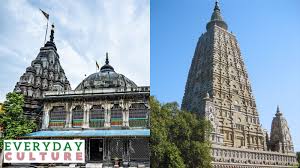
- 18 Sep 2024
Why in News?
The Union Budget 2024-25 announced plans to develop corridor projects for the Vishnupad Temple at Gaya and the Mahabodhi Temple at Bodh Gaya in Bihar. These initiatives aim to enhance both temples as significant pilgrimage and tourist destinations, modeled after the successful Kashi Vishwanath Corridor. The temples are located approximately 10 kilometers apart and hold considerable cultural significance.
Key Facts About the Temples
Vishnupad Temple at Gaya
- Location: Situated on the banks of the Phalgu/Falgu River in Gaya district, Bihar.
- Deity: Dedicated to Lord Vishnu.
- Legend: Local mythology recounts that a demon named Gayasur sought the power to help others attain moksha (liberation). After misusing this power, he was subdued by Lord Vishnu, who left a footprint at the temple, symbolizing this event.
- Architectural Features: The temple stands about 100 feet tall and is supported by 44 pillars made from large gray granite blocks (Munger Black stone), joined with iron clamps. The octagonal shrine is oriented towards the east.
- Construction: Built in 1787 under Queen Ahilyabai Holkar's orders.
- Cultural Practices: The temple is especially significant during Pitra Paksha, a time for honoring ancestors, attracting many devotees. The Brahma Kalpit Brahmins, or Gayawal Brahmins, have served as traditional priests since ancient times.
Mahabodhi Temple at Bodh Gaya
- Historical Significance: Believed to be the location where Gautam Buddha attained enlightenment under the Mahabodhi Tree.
- Construction: Originally built by Emperor Ashoka in the 3rd century BC, with the current structure dating back to the 5th–6th centuries.
- Architectural Features: The temple complex includes the 50-meter-high Vajrasana (the Diamond Throne), the sacred Bodhi Tree, and six other sacred sites associated with Buddha's enlightenment. The site is surrounded by numerous ancient Votive stupas and is protected by circular boundaries.
- Sacred Sites:
- Bodhi Tree: A direct descendant of the original tree under which Buddha attained enlightenment.
- Animeshlochan Chaitya: Where Buddha spent the second week of meditation post-enlightenment.
- Ratnachakrama: Site of Buddha's third week after enlightenment.
- Ratnaghar Chaitya: Site of Buddha's fourth week after enlightenment.
- Ajapala Nigrodh Tree: Site of Buddha’s fifth week after enlightenment.
- Lotus Pond: Site of Buddha’s sixth week after enlightenment.
- Rajyatana Tree: Site of Buddha’s seventh week after enlightenment.
- Recognition: Designated a UNESCO World Heritage Site in 2002, the Mahabodhi Temple attracts numerous national and international pilgrims, emphasizing its spiritual importance.
Other Tourist Attractions in Bihar
Additional notable tourist sites in Bihar include:
- Vishwa Shanti Stupa in Rajgir
- Nalanda
- Ancient city of Patliputra
- Valmiki Nagar Tiger Reserve in West Champaran
What is the Pilgrim Corridor Project (PCP)?
The Pilgrim Corridor Project (PCP) aims to upgrade religious sites into world-class destinations for spiritual and tourism purposes.
India-China Disengagement Along the LAC
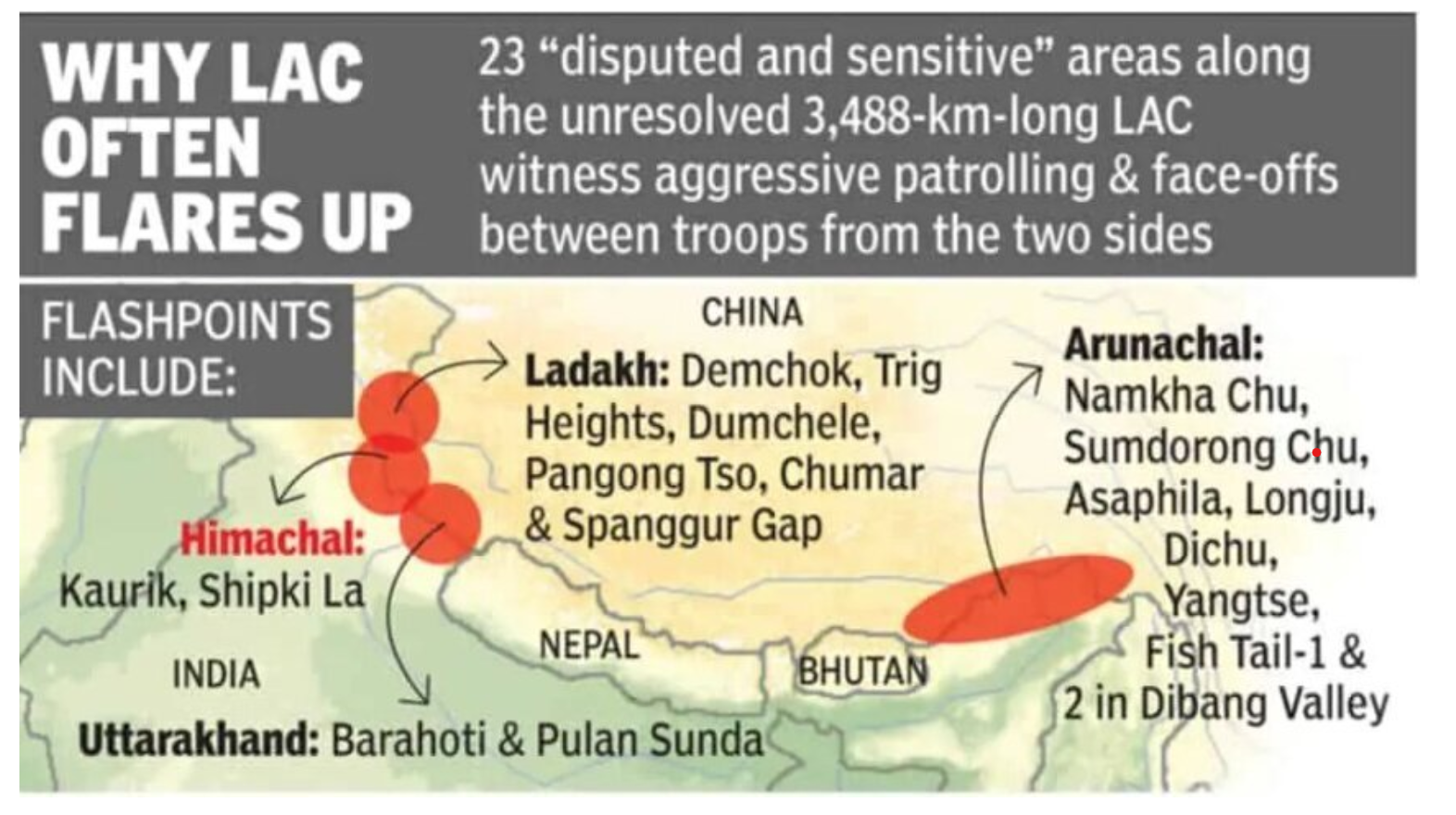
- 18 Sep 2024
Overview of Disengagement Progress
Recently, India’s External Affairs Minister announced that about 75% of the “disengagement problems” with China along the Line of Actual Control (LAC) in Ladakh have been “sorted out.” However, notable areas such as Demchok and the Depsang plains have seen no progress toward resolution over the past two years.
Recent Developments on India-China Disengagement
Verified Disengagement
India and China have mutually agreed to and verified disengagement from five friction points, including:
- Galwan Valley
- Pangong Tso
- Gogra-Hot Springs
Despite this, issues in Demchok and Depsang remain unresolved.
Diplomatic Efforts
Recent high-level diplomatic interactions have facilitated the disengagement along the LAC. Key meetings include:
- India’s National Security Advisor Ajit Doval meeting Chinese Foreign Minister Wang Yi at the BRICS NSAs meeting in St Petersburg, Russia.
- Anticipation for further disengagement is linked to the upcoming BRICS Summit in October in Kazan, Russia, where leaders from both nations are expected to meet.
Significance of Disengagement
The 31st meeting of the Working Mechanism for Consultation & Coordination on India-China Border Affairs (WMCC) was described as “frank, constructive, and forward-looking.” Participants urged both parties to “narrow down the differences” and “find early resolution of the outstanding issues.” The phrase "narrow down the differences" marks a hopeful shift in the dialogue surrounding the border standoff.
Strategic Importance of Depsang Plains and Demchok
Depsang Plains
The Depsang Plains hold strategic significance due to the following reasons:
- The People’s Liberation Army (PLA)’s control threatens India’s position over the Siachen Glacier, potentially encircling the Indian Army between China and Pakistan.
- A coordinated attack from both China and Pakistan would leave India’s military position on the Siachen Glacier vulnerable.
- The Indian Army identifies this region as particularly susceptible to mechanized warfare due to its flat terrain, which also offers direct access to Aksai Chin.
Demchok
Demchok is crucial for several reasons:
- It facilitates effective surveillance of Chinese movements and activities in the Aksai Chin region.
- It supports essential road and communication links that enable rapid military mobilization and logistical support.
Key Areas in the India-China Standoff
Pangong Lake Region
- This area frequently sees patrols from both India and China intersecting.
- The north bank of the lake is divided into eight "fingers," with India claiming territory up to Finger 8 and China disputing it down to Finger 4.
Demchok Region
- Recent reports indicated increased Chinese activity and heavy equipment movement.
Galwan River Basin
- Satellite imagery revealed Chinese tents near the Galwan River basin, suggesting incursions into traditionally held Indian territories.
Gogra Post
- A Chinese military buildup near the Gogra post has escalated tensions.
Daulat Beg Oldie (DBO)
- Chinese encroachments have been reported in the DBO sector, located on the Indian side.
- The DBO airstrip is critical for winter operations and reinforcements, accessible via the 255 km-long Darbuk-Shyok-DBO road.
India Status Report on Road Safety 2024
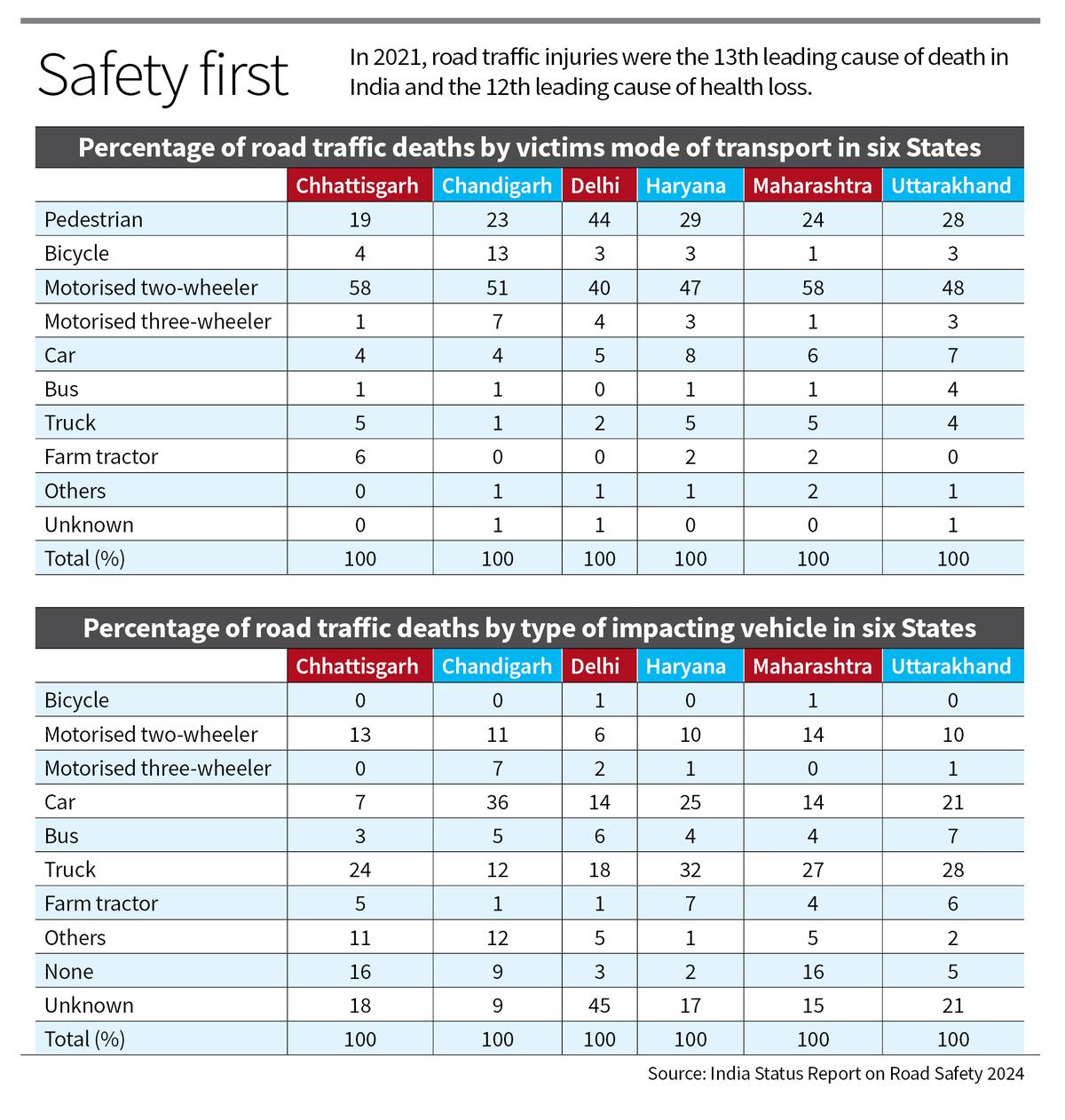
- 18 Sep 2024
In News:
The "India Status Report on Road Safety 2024," prepared by the TRIP Centre at IIT Delhi, highlights India's slow progress in reducing road accident fatalities and emphasizes the need for a tailored approach to road safety.
Key Findings:
- Road Safety Analysis:
- The report analyzes road safety data from FIRs across six states and evaluates compliance with Supreme Court directives on road safety.
- There are significant disparities in road traffic death rates among states, with motorcyclists and truck-related fatalities being notably high.
- Road traffic injuries remain a critical public health issue, with little progress in reducing fatalities. Many states are unlikely to meet the UN goal of halving traffic deaths by 2030.
- Health Impact:
- In 2021, road traffic injuries ranked as the 13th leading cause of death in India and the 12th leading cause of health loss (measured in Disability-Adjusted Life Years, or DALYs). Six states listed road traffic injuries among their top 10 health loss causes.
- Crash Surveillance Deficiencies:
- India lacks a national crash-level database, relying on police station records, which are often incomplete and inaccurate. This hampers effective public policy and intervention strategies.
- State Performance:
- There is a threefold variation in per capita death rates across states. Tamil Nadu, Telangana, and Chhattisgarh have the highest rates, while West Bengal and Bihar have the lowest.
- Pedestrians, cyclists, and motorized two-wheeler riders are the most common accident victims, with trucks accounting for a large share of accidents.
- Helmet usage is low, especially in rural areas, and basic traffic safety measures are inadequate across many states.
- Global Comparison:
- India's road safety governance is starkly lagging compared to developed nations. By 2021, Indians were 600% more likely to die in road accidents compared to their counterparts in countries like Sweden.
Recommendations for Improvement
- National Database: Establish a comprehensive, publicly accessible database for fatal crashes to enhance understanding of risks and evaluate the effectiveness of interventions.
- Scaled Interventions: Prioritize road safety measures at both Central and State levels, tailored to the specific challenges of each region.
- Public Awareness and Safety: Increase public awareness of road safety measures, particularly helmet usage, and improve trauma care facilities.
- Infrastructure Audit: Conduct thorough audits of National and State Highways to identify safety gaps and implement necessary improvements.
By implementing these recommendations, India can take meaningful steps toward improving road safety and reducing fatalities.
Nipah viral infection
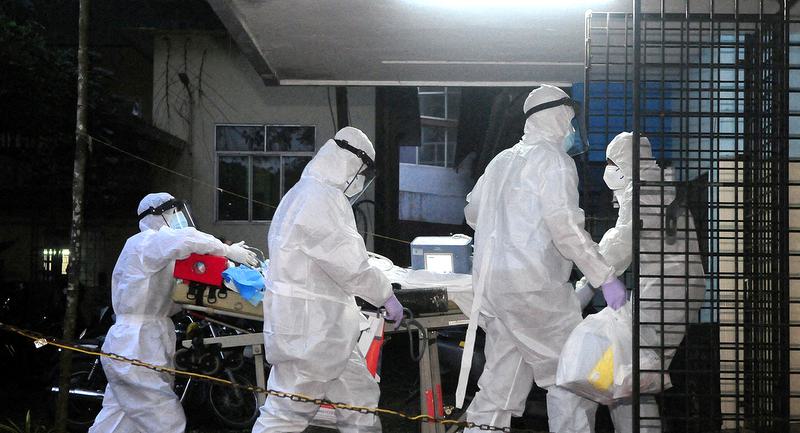
- 17 Sep 2024
In News:
- The district administration has imposed restrictions on social gatherings and made masks mandatory in Malappuram district after a 24-year-old man from Naduvath, near Wandoor, died from the Nipah viral infection.
- Five wards in Tiruvali and Mampad grama panchayats have been declared containment zones. Schools, colleges, madrasas, anganwadis and cinema halls in these zones will remain closed until further notice.
What is Nipah?
- Nipah is a viral infection that mainly affects animals such as bats, pigs, dogs and horses.
- It is known to cause infection in humans when they come in contact with saliva, urine, or faecal matter of infected animals — by eating fruits that have been bitten into by the animals or scaling trees were the bats live.
- It can also be transmitted human to human through close contact, but this is not the most common route of transmission.
- The case fatality ratio of Nipah can be extremely high at 40 to 75%. To compare, even at the peak of the Covid-19 pandemic, the case fatality ratio (CFR) – proportion of people who die among those who test positive – remained at around 3%.
What are the symptoms of Nipah?
People with Nipah start showing symptoms around four to 14 days after getting infected. The infection causes fever, headache, cough, sore throat and difficulty breathing. In later stages, the infection can also lead to brain swelling or encephalitis, leading to confusion, drowsiness, and seizures. With encephalitis, people can go into coma within 24 to 48 hours.
How does the Nipah monoclonal antibody work?
The monoclonal antibody binds with the part of the viral envelope that attaches to the human cells to gain entry. Given early in the disease, it prevents the virus from entering more and more cells, thereby stopping its proliferation and severe disease.
The monoclonal antibody has to be administered in the early stages of the disease, before encephalitis sets in.
India first imported 20 doses of the monoclonal antibodies — enough for ten patients — from a laboratory in Australia’s University of Queensland during the 2018 outbreak. Another 20 doses were requested last year. The monoclonal antibody has so far been used in 14 individuals globally and none of them died.
What can be done to protect yourself?
Usually, Nipah outbreaks are localised, meaning people from the rest of the country are not at risk of the infection at present. People from areas where cases are detected should refrain from coming in close contact with the family members and other contacts of the two case. With the infection transmitted by fruit bats, the government also suggests precautions like washing the fruits and peeling them before consumption. Fruits with signs of bat bites should be discarded. And, palm sap or juice must be boiled before consumption.
All-India Reservoir Status
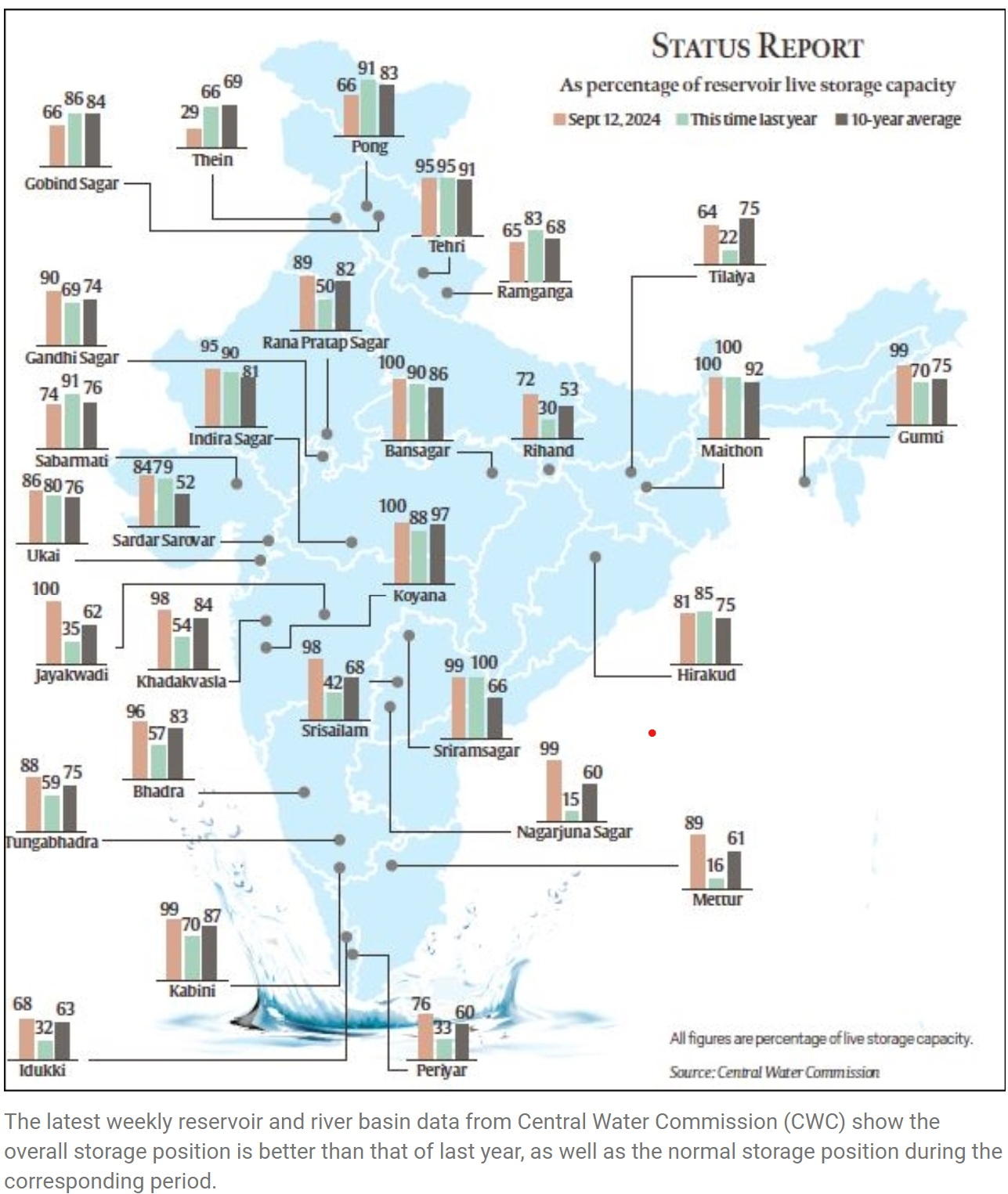
- 17 Sep 2024
In News:
The southwest monsoon has provided significant rainfall across India, with total precipitation at 836.7 mm as of September 12, marking an 8% surplus for this time of year. The Central Water Commission (CWC) reports that reservoir levels are notably higher compared to last year and the 10-year average.
All-India Reservoir Status
- Total Capacity: 180.852 billion cubic metres (BCM) across 155 reservoirs.
- Current Storage: 153.757 BCM, which is 85% of total capacity.
- Last Year Comparison: 119.451 BCM (66%) and 10-year average of 130.594 BCM.
Regional Reservoir Highlights:
- North: 11 reservoirs at 68% capacity (13.468 BCM). Storage is lower than last year (81%) and decadal average (82%). Himachal Pradesh and Punjab saw significant rainfall deficits.
- East: 25 reservoirs at 76% capacity (15.797 BCM), improved from last year's 58%. Despite deficits in Nagaland and Bihar, overall rainfall has supported reservoir levels.
- West: 50 reservoirs at 90% capacity (33.526 BCM), a marked increase from 75% last year. Heavy rainfall, particularly in Gujarat, has led to flooding but boosted water reserves.
- Central: 26 reservoirs at 89% capacity (42.808 BCM), better than last year's 76%. This region has enjoyed normal or above-average rainfall.
- South: 43 reservoirs at 88% capacity (48.158 BCM), significantly higher than 49% last year. Regions traditionally receiving less monsoon rain have also seen improvements.
Comparison to 2023
- Improved Storage: Notable increases in states like Jharkhand, Odisha, West Bengal, and several others.
- Stable: No change in Goa and Telangana.
- Declines: Himachal Pradesh, Punjab, and Uttarakhand show worse conditions compared to last year.
River Basin Status
Major river basins exhibit normal or above storage levels, including:
- Barak (98.72%)
- Krishna (94.53%)
- Cauvery (93.54%)
- Narmada (92.19%)
- Godavari (91.85%)
- Others range from 83% to 66%.
Overall, the 2024 monsoon has led to improved water storage conditions across much of India, benefiting numerous states while highlighting specific areas of concern.
Precision Farming
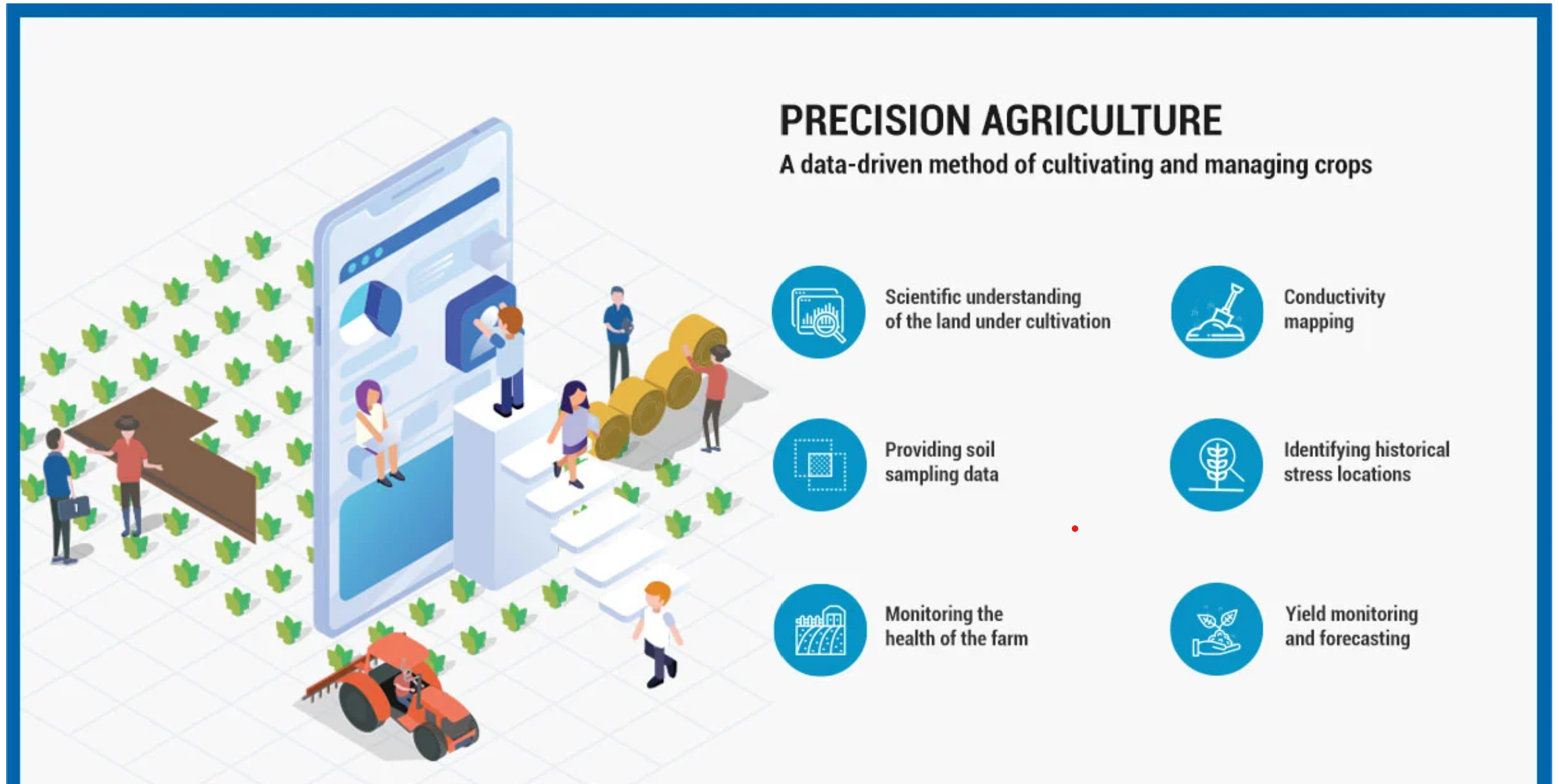
- 17 Sep 2024
In News:
The Centre is contemplating to earmark Rs 6,000 crore to promote precision farming, a modern approach that uses smart technology such as Internet of Things, Artificial Intelligence, drones and data analytics to boost production through maximal use of resources while minimising environmental impact.
Key Details:
- Union Ministry of Agriculture is planning a Smart Precision Horticulture Programme under the existing Mission for Integrated Development of Horticulture (MIDH) scheme.
- It will cover 15,000 acres of land in five years from 2024-25 to 2028-29 and is expected to benefit about 60,000 farmers.
- At present, the Agriculture Infrastructure Fund (AIF), launched during Covid-19, has provisions for financing infrastructure projects for smart and precision agriculture.
- Under AIF, individual farmers as well as farmers’ communities such as Farmer Producer Organization, Primary Agricultural Credit Societies and SHGs are eligible for loans with interest subvention of 3% for using technological solutions in farm practices. These practices include farm/ harvest automation; purchase of drones, putting up specialised sensors on field; use of blockchain and AI in agriculture; remote sensing and Internet of Things (IoT).
Positive impact
- Smart and precision agriculture maximises use of resources like water, fertilisers and pesticides to increase production quality and quantity, all while insulating farmers from vagaries of climate change and other uncertainties, besides ensuring sustainable farming.
Apart from offering financial support, the Centre is also considering collaborating with the Netherlands and Israel, where tech-based modern farming solutions are being used, through Centres of Excellences (CoEs). The number of CoEs is likely to be 100 in the next five years. Under Indo-Israel Agriculture Project, 32 CoEs have already been set up across 14 states.
The Centre has also set up 22 Precision Farming Development Centres (PFDCs) across the country to test new technologies and modify them according to local needs.
According to the Ministry, these 22 PFDCs are located across State/Central Agricultural Universities, ICAR Institutes and IITs in TN, Karnataka, Madhya Pradesh, Odisha, Rajasthan, Haryana, Telangana, West Bengal, Ladakh, UP, Punjab, Gujarat, Uttrakhand, Maharashtra, Chhattisgarh, Jharkhand, Bihar, Himachal Pradesh, Kerala, Manipur and Assam. Besides, funds are released to states/UTs for projects involving use of AI and machine learning, under schemes like the National e-Governance Plan in Agriculture.
What is Precision Agriculture?
- Precision Agriculture is a farm management concept that revolves around the process of observing, measuring, and responding to various inter-and intra-field variability inputs for modern agriculture.
- Popular definitions of Precision Agriculture (PA) or Site-Specific Crop Management (SSCM) describe the term as a technology-enabled approach to farming management that observes, measures, and analyzes the needs of individual fields and crops.
- The goal of precision agriculture is to increase efficiency and productivity, reduce input costs, and improve environmental sustainability.
- Key Advantages:
- A refined set of cultivation practices and choice of crops based on the suitability of land
- Elimination of volatility and risk
- Waste management
- Reduced production costs
- Minimum environmental impact
- Optimized use of fertilizers
- Water management with optimized irrigation practices
- Improved soil health
What is the current status of the introduction of African cheetahs?
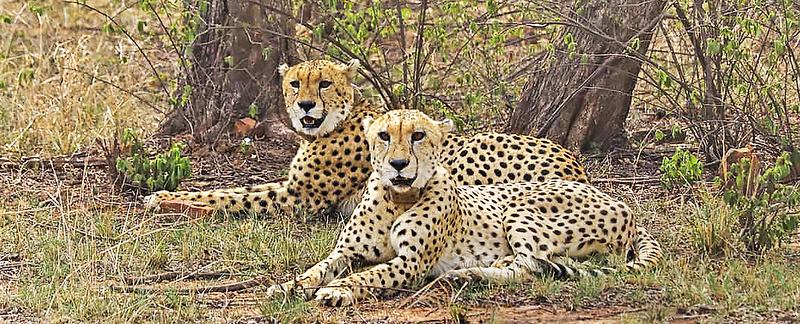
- 17 Sep 2024
In News:
Project Cheetah has encountered significant setbacks, including prolonged captivity and cheetah fatalities; with long-term success hinging on finding sufficient habitat, scientific management, and community support, the project’s future depends on overcoming these enormous challenges.
Overview of Project Cheetah:
- Cheetah Action Plan (CAP): India’s initiative to reintroduce African cheetahs, aimed at species conservation and ecosystem restoration.
- Long-term Commitment: Requires a minimum of 25 years of financial, technical, and administrative support from various governmental bodies.
Challenges Faced:
- Extended Captivity:
- Cheetahs have been held in captivity longer than planned, with only 12 of the original 20 surviving.
- Delays in the release process raise concerns about the cheetahs' fitness for survival in the wild.
- Health Issues and Fatalities:
- Several cheetahs have died due to pre-existing health conditions or management failures before being released.
- Captivity duration exceeds guidelines set by Namibian policy, rendering the cheetahs unfit for release.
- Environmental Adaptation Problems:
- Some deaths attributed to environmental stressors, such as heat stroke and improper management of conditions leading to health complications.
Location for Introduction:
- Kuno National Park: Chosen for its suitable habitat and prey base. However, many cheetahs remain confined, with release dates now pushed to late 2024 or early 2025.
- Additional Sites: Plans for a captive breeding facility in Gujarat and potential releases in Nauradehi Wildlife Sanctuary.
Management and Oversight:
- An expert committee, led by the National Tiger Conservation Authority (NTCA), oversees the project. Responsibilities include negotiating with African countries for cheetah procurement and implementing field activities.
Goals and Measurable Outcomes:
- Short-term Objectives: Achieve a 50% survival rate in the first year, establish home ranges, and generate eco-tourism revenue.
- Long-term Success: Establish a stable cheetah population, improve habitat quality, and support local economies.
Future Considerations:
- The project lacks a definitive sunset clause but will require ongoing management for decades.
- The key question remains whether India has sufficient habitat (4,000 to 8,000 sq. km) to support a viable population of free-ranging cheetahs.
Conclusion: Project Cheetah faces significant challenges in achieving its ambitious conservation goals, raising questions about its long-term viability and management practices.
Why is T.N.’s education funding on hold?
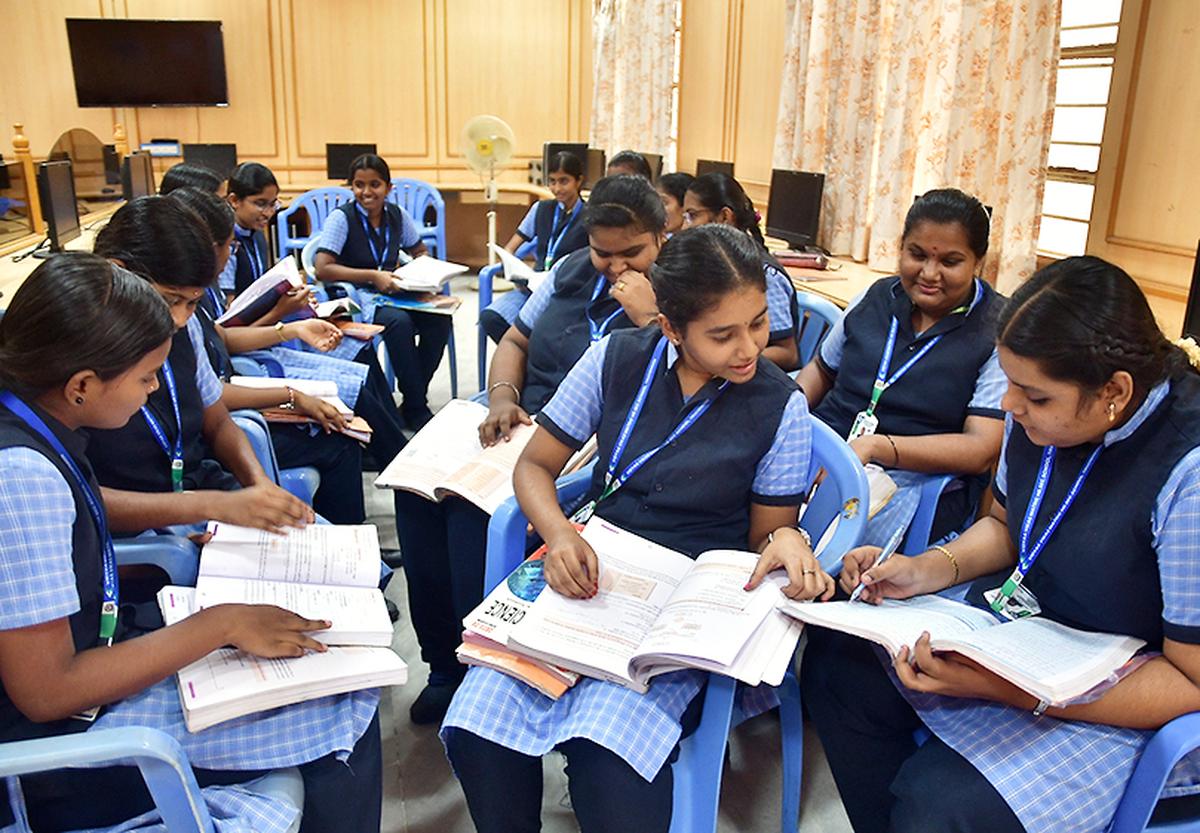
- 17 Sep 2024
In News:
Tamil Nadu is yet to receive this year’s funds from the Union government under the flagship education scheme Samagra Shiksha. According to the State government, the Centre has linked these funds to the complete implementation of the National Education Policy (NEP) 2020, which includes provisions that the State has opposed, including the contentious three-language formula.
What is Samagra Shiksha and why has Tamil Nadu not gotten funds under it?
- Samagra Shiksha is an integrated Centrally-sponsored scheme for school education from nursery till Class 12, with components for teacher training and salaries, special education, digital education, school infrastructure, administrative reform, vocational and sports education, with grants for textbooks, uniforms, and libraries, among others.
- The scheme’s estimated outlay between 2021 and 2026 is ?2.94 lakh crore, with the Centre and States contributing funds in a 60:40 ratio. For 2024-25, Tamil Nadu’s allocation under the scheme amounts to ?3,586 crore of which the Central share is ?2,152 crore, with a first quarterly instalment of ?573 crore, which has not yet arrived halfway through the financial year.
- In a letter to Prime Minister Narendra Modi last month, Tamil Nadu Chief Minister M.K. Stalin accused the Centre of imposing a prerequisite for the fund’s disbursal, namely, the signing of a Memorandum of Understanding (MoU) for another Centrally-sponsored education scheme called PM Schools for Rising India (PM Shri).
- This scheme, being run from 2022-2027, aims to create 14,500 model schools across the country to showcase the implementation of NEP 2020, and has a much smaller project cost of ?27,360 crore. The Centre has sent at least 10 letters to Tamil Nadu from September 2022, asking the State to sign the MoU, which included an agreement to fully implement the NEP.
In March 2024, Tamil Nadu committed to signing the PM Shri MoU due to its link to delayed funding for the larger Samagra Shiksha scheme. However, after signing a modified MoU in July that excluded NEP implementation, the Centre found it unacceptable. In August, Chief Minister M.K. Stalin noted that states signing the MoU received funds, accusing the Centre of “denying funds to the best-performing States” for not complying with NEP. The Union Education Ministry labeled these claims as misleading, but Tamil Nadu has not received Samagra Shiksha funds due to the incomplete MoU.
What is Tamil Nadu’s problem with the NEP 2020?
Tamil Nadu Education Minister highlighted the state's objections to specific NEP elements, such as the three-language formula and curriculum changes. He stated that Tamil Nadu is already implementing many acceptable aspects of the NEP through its own initiatives and warned that linking Samagra Shiksha funds to full NEP compliance infringes on the state's constitutional autonomy in education.
Tamil Nadu’s draft State Education Policy (SEP), submitted in July, clearly indicates that the State wants to stick to the 5+3+2+2 curricular formula, rather than the NEP, which includes the pre-school years. The SEP also proposes five years as the age of entry to Class 1, as against six years in the NEP. The State wants undergraduate college admissions to be based on Class 11 and 12 marks, rather than a common entrance test as proposed by the NEP. The biggest hurdle, however, is the NEP’s three-language formula.
Why does Tamil Nadu oppose the three-language formula?
The NEP 2020 recommends using the mother tongue or local language as the medium of instruction until Class 5, with all students learning at least three languages, including two native to India. This three-language formula has been part of every NEP since 1968 but has faced long-standing opposition in Tamil Nadu, rooted in historical movements against mandatory Hindi.
Tamil Nadu follows a two-language policy, requiring students to study Tamil and English, while allowing the choice of an optional third language, such as Hindi. Education Minister Anbil Mahesh emphasized Tamil's importance in the state's identity alongside English proficiency.
While the NEP offers flexibility and states that no language will be imposed on any state, allowing students to choose Tamil as a third language, all major political parties in Tamil Nadu have rejected the three-language formula. In response to concerns about opposing mother-tongue education, Mahesh affirmed the state prioritizes inclusive learning with Tamil at its core.
Pink Bollworm Attack
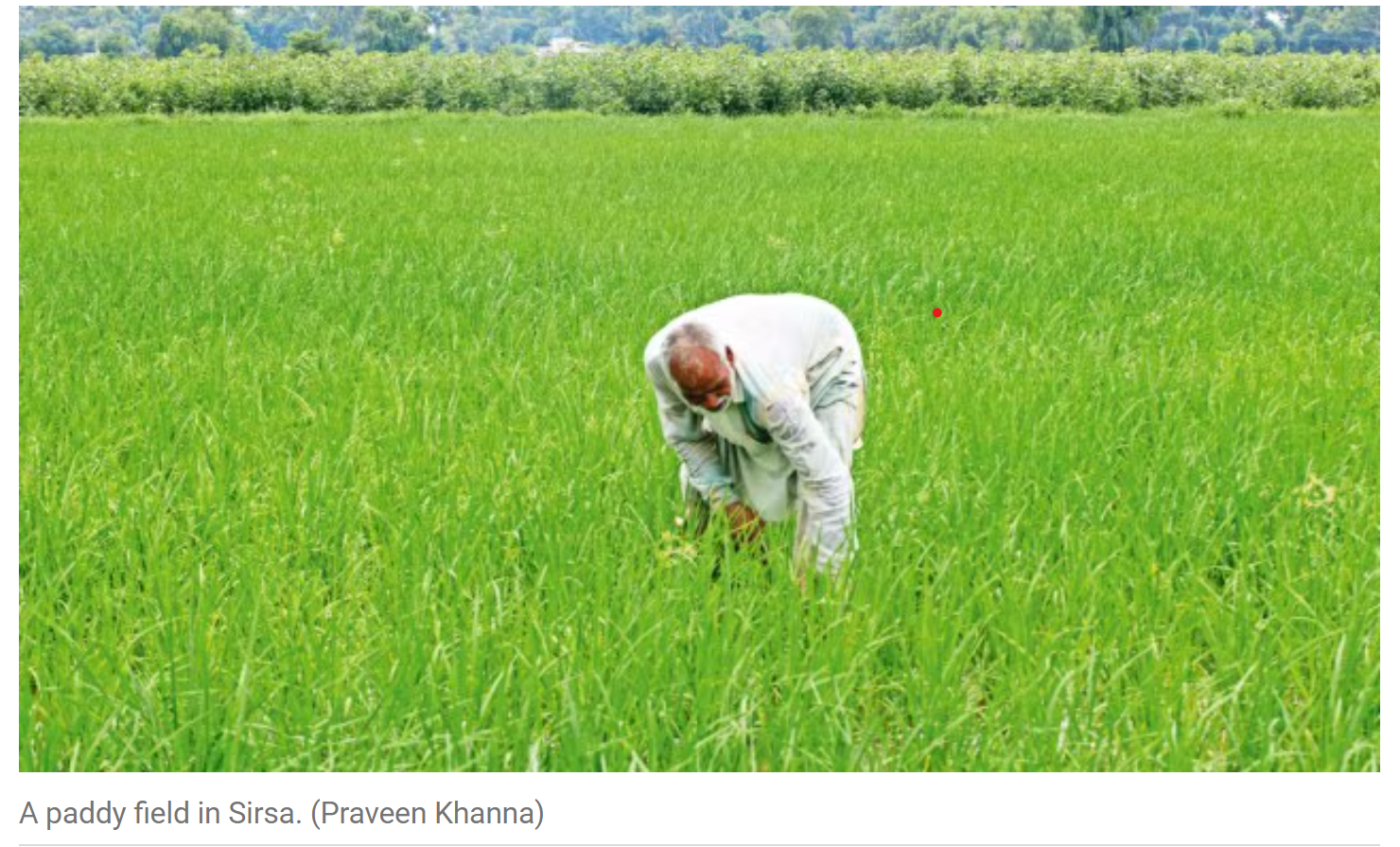
- 16 Sep 2024
In News:
Haryana has seen an overall fall in acreage under cotton cultivation to 4.76 lakh hectares (lh) this kharif season from 6.65 lh in 2023. This has been accompanied by an increase in the area under rice from 15.20 lh to an all-time-high of 16.44 lh in the state.
Key Details:
- The reduction in the cotton area — also reported in neighbouring Rajasthan (from 7.91 lh to 5.13 lh) and Punjab (2.14 lh to 1 lh) — has been attributed mainly to PBW infestation.
- In May-June this year, at the time of sowing, the price of kapas (raw unginned cotton) averaged Rs 6,700-6,800 per quintal in Haryana mandis. This was against the average Rs 11,100-11,200 per quintal two years ago.
Pink Bollworm (PBW) Infestation:
- Impact: The pink bollworm has devastated cotton yields by attacking the bolls, which affects the weight and quality of the cotton. This pest has been particularly damaging since its appearance in 2017-18 and has caused significant losses in Haryana, Rajasthan, and Punjab.
- Spread: PBW spreads through the air and infected crop residues, which harbor larvae and spread to future crops. This infestation has led to a dramatic decrease in cotton acreage.
The spread of pink bollworm
- The pink bollworm first appeared in north India during the 2017-18 season in a few districts in Haryana and Punjab, primarily cultivating Bt cotton, and spread to Rajasthan by 2021.
- PBW primarily spreads through the air. Residue of infected crops, often left by farmers on the field to be used as fuel, can also harbour PBW larvae which can then infect future crops. Infected cotton seeds are another reason behind the pest’s spread.
Economic Impacts:
- Price Decline: The price of kapas (raw cotton) has dropped from Rs 11,100-11,200 per quintal to Rs 6,700-6,800, significantly impacting farmers’ profitability.
- Farmer Losses: Farmers like Shyam Sundar have reported substantial losses due to low yields and poor quality, leading them to switch to more profitable and reliable crops like paddy and guar.
Transition to Paddy
Water Requirements:
- Challenges: Paddy requires much more water compared to cotton. Farmers need to flood their fields, which is challenging in regions where groundwater is saline or limited.
- Current Practices: Despite the increased water requirements, some farmers have transitioned to paddy due to its potentially better economic returns, especially when paddy prices are relatively high.
Monsoon and Irrigation:
- Weather Dependence: The monsoon this year has been favorable, allowing some farmers to successfully grow paddy. However, reliance on monsoon and supplementary irrigation from tubewells is not sustainable in the long term.
Government and Expert Perspectives
Government Incentives:
- Subsidies: The Haryana government is offering incentives for farmers switching to alternative crops and using water-saving techniques like direct seeding of paddy.
- Support: While there is support available, the effectiveness and reach of these measures are mixed, and some farmers have faced issues with insurance claims and financial aid.
Expert Opinions:
- Temporary Solution: Experts caution that while switching to paddy may be a temporary solution, it is not sustainable long-term due to water scarcity and environmental concerns.
- Environmental Impact: Paddy cultivation contributes to higher carbon and methane emissions, which adds to the environmental challenges in the region.
Economic and Industry Implications
Cotton Industry Concerns:
- Reduced Production: Lower cotton production affects the entire supply chain, from textile manufacturers to cottonseed oil and meal producers.
- Potential Recovery: There is hope that reduced PBW infestation this year may lead to a recovery in cotton yields, but the extent of this recovery remains uncertain.
NIDHI Companies

- 16 Sep 2024
In News:
The Registrar of Companies has imposed penalties on over two dozen Nidhi companies for breaches of the Companies Act, such as delayed financial filings and share allotment issues. Fines range from ?20,000 to ?12.5 lakh, with Sri Sathuragiri Nidhi receiving the highest penalty.
What is Nidhi Company?
A Nidhi Company is a unique NBFC regulated under the Companies Act, 2013, and the Nidhi Rules, 2014. Nidhi company signifies that these companies promote thrift and savings habits among their members by accepting deposits and providing loans. They primarily cater to their local communities and operate within a defined geographical area.
Requirements for Obtaining Nidhi Company Status:
Within One Year of Registration:
- Minimum Membership: A Nidhi company must have at least 200 members within one year of starting operations.
- Financial Strength: The company's net owned funds (equity share capital + free reserves - accumulated losses - intangible assets) must be ?10 lakh or more.
- Deposit Security: Unencumbered term deposits (deposits not pledged as security) must be at least 10% of the total outstanding deposits.
- Healthy Debt Ratio: The ratio of net owned funds to deposits should not exceed 1:20. This ensures the company has sufficient capital to back its deposit liabilities.
Compliance Filing:
If a Nidhi company meets all the above conditions within the first year, it must file form NDH-1 along with the prescribed fees within 90 days from the end of that financial year. The form needs to be certified by a practicing Chartered Accountant (CA), Company Secretary (CS), or Cost and Works Accountant (CWA).
Extension Option:
Companies that are unable to meet the requirements within the first year can apply for an extension of one additional financial year. To do so, they need to submit form NDH-2 to the Regional Director within 30 days from the end of the first financial year.
Strict Enforcement:
If a Nidhi company fails to meet the requirements even after the second financial year, it will be prohibited from accepting new deposits until it complies with the regulations. Additionally, it may face penalties for non-compliance.
Benefits of Nidhi Company Registration
Nidhi companies offer several advantages for entrepreneurs:
- Tax benefits: They can enjoy tax exemptions on their profits under certain conditions.
- Reduced regulatory burden: Compared to other NBFCs, Nidhi companies face less stringent regulations.
- Local focus: They cater to the specific financial needs of their communities, fostering local economic development.
- Enhanced credibility: Registration brings legitimacy and builds trust among members.
Eligibility for Nidhi Company Registration
For registration of Nidhi company, the following requirements must be met:
- Minimum members: A minimum of seven members are required at the time of incorporation.
- Minimum capital: The minimum paid-up capital must be Rs. 5 lakh.
- Business restrictions: Nidhi companies cannot undertake activities like issuing debentures or underwriting insurance.
- Profit distribution: They can only distribute a maximum of 20% of their net profit as dividend.
BHASKAR Platform
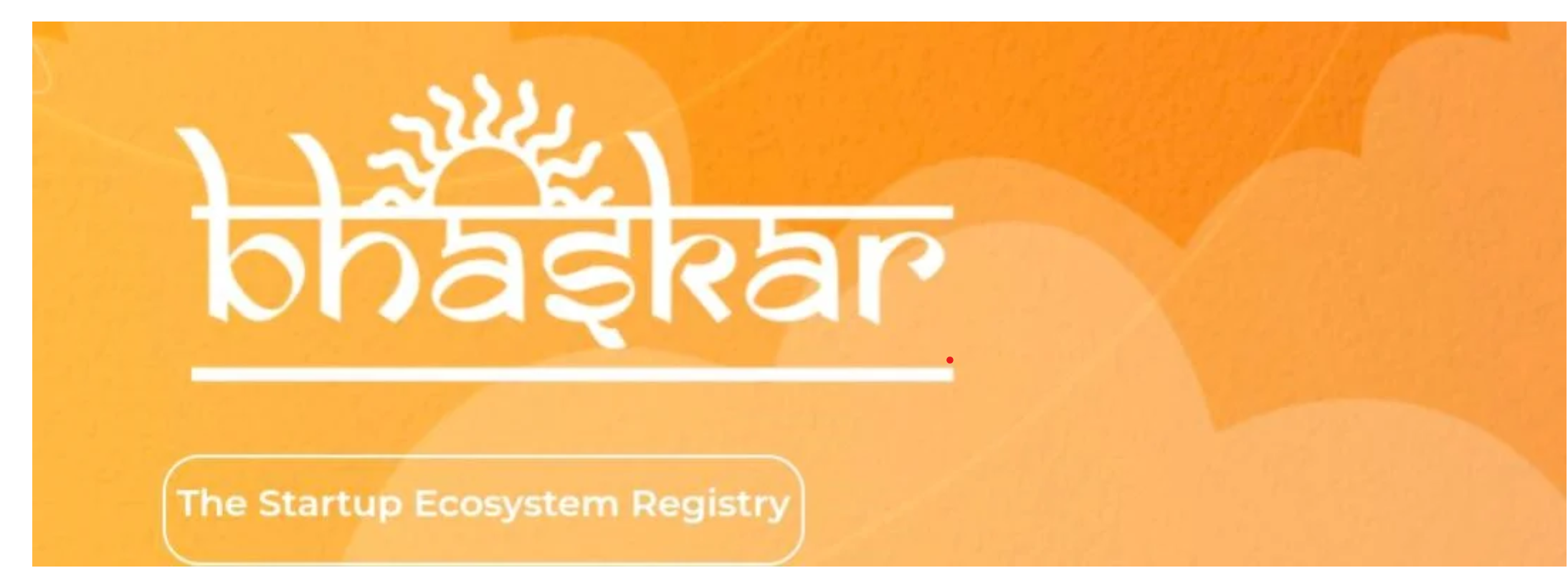
- 16 Sep 2024
In News:
The Department for Promotion of Industry and Internal Trade (DPIIT), Ministry of Commerce and Industry, is set to launch a groundbreaking digital platform aimed at strengthening India’s startup ecosystem.
Key Details:
- The Bharat Startup Knowledge Access Registry (BHASKAR) initiative, under the Startup India program, is a platform designed to centralize, streamline, and enhance collaboration among key stakeholders within the entrepreneurial ecosystem, including startups, investors, mentors, service providers, and government bodies.
- This initiative aligns with the Government of India’s vision to transform India into a global leader in innovation and entrepreneurship, reinforcing the country’s commitment to the startup movement.
Empowering Innovation Through a Centralized Platform
- India, home to over 1,46,000 DPIIT-recognized startups, has rapidly become one of the world’s most dynamic startup hubs. BHASKAR seeks to leverage this potential by providing an all-encompassing, one-stop digital platform that addresses the challenges faced by entrepreneurs and investors alike.
- By serving as a centralized registry, BHASKAR will enable seamless access to a wide array of resources, tools, and knowledge that will help fuel the entrepreneurial journey from ideation to execution.
- BHASKAR is designed to foster a conducive environment for networking, collaboration, and growth within the startup ecosystem.
- By providing personalized BHASKAR IDs for each stakeholder, the platform will facilitate easier interaction, enhance searchability, and allow for efficient discovery of relevant opportunities and partnerships.
Key Features of BHASKAR
- The primary goal of BHASKAR is to build the world’s largest digital registry for stakeholders within the startup ecosystem. To achieve this, the platform will offer several key features:
- Networking and Collaboration: BHASKAR will bridge the gap between startups, investors, mentors, and other stakeholders, allowing for seamless interaction across sectors.
- Providing Centralized Access to Resources: By consolidating resources, the platform will provide startups with immediate access to critical tools and knowledge, enabling faster decision-making and more efficient scaling.
- Creating Personalized Identification: Every stakeholder will be assigned a unique BHASKAR ID, ensuring personalized interactions and tailored experiences across the platform.
- Enhancing Discoverability: Through powerful search features, users can easily locate relevant resources, collaborators, and opportunities, ensuring faster decision-making and action.
- Supporting India’s Global Brand: BHASKAR will serve as a vehicle for promoting India’s global reputation as a hub for innovation, making cross-border collaborations more accessible to startups and investors alike.
Driving Forward India’s Startup Ecosystem
- The launch of BHASKAR marks a significant step forward in the government’s ongoing efforts to promote innovation, entrepreneurship, and job creation. It will serve as a central hub where startups, investors, service providers, and government bodies can come together to collaborate, exchange ideas, and accelerate growth.
- By facilitating easy access to knowledge and resources, BHASKAR will help unlock the full potential of India’s startup ecosystem, driving the country’s emergence as a global leader in entrepreneurship. The platform will be pivotal in creating a more resilient, inclusive, and innovation-driven economy, laying the foundation for a prosperous future.
BHASKAR: Shaping the Future of India's Startups
As India’s startup ecosystem continues to grow, BHASKAR will play a critical role in enhancing the country’s global standing in entrepreneurship. By fostering a culture of collaboration, the platform will help startups overcome challenges and build innovative solutions that address the needs of tomorrow.
With the launch of BHASKAR, the Government of India is reinforcing its commitment to making India a leader in global innovation, entrepreneurship, and economic growth.
International Day of Democracy
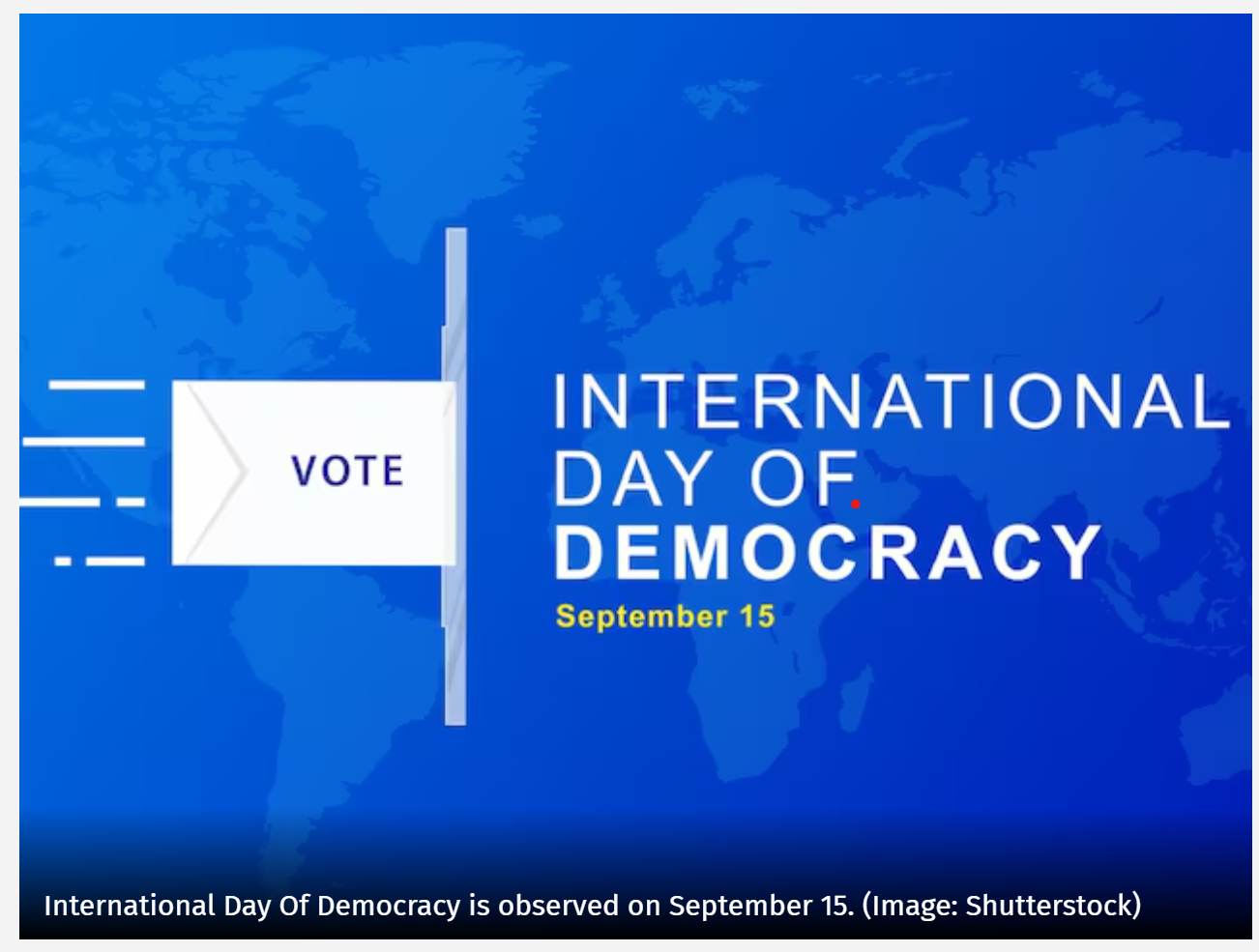
- 16 Sep 2024
In News:
Karnataka marked the 'International Day of Democracy' by forming a 'historic' 2,500-km-long human chain as a symbol of equality, unity, fraternity, and participative governance. The massive human chain, which according to the Karnataka government will be the "world's longest", is being formed across the state from Bidar to Chamarajanagar, covering all 31 districts.
Key Highlights:
- Democracy Day is an annual celebration observed on September 15.
- The United Nations General Assembly established this day in 2007 to emphasise the global significance of democracy. It serves as a reminder that democracy is not merely a fixed condition, but an ongoing pursuit. It calls for active engagement from international organizations, nation-states, civil society and people to pursue the democratic idea.
International Day of Democracy History
- The International Day of Democracy was accredited by the United Nations General Assembly (UNGA) on November 8, 2007, by passing a resolution entitled “Support by United Nations system of efforts of governments to promote and consolidate new or restored democracies.”
- September 15 was chosen to coincide with the anniversary of the Inter-Parliamentary Union’s Universal Declaration on Democracy, which was adopted in Geneva on September 15, 1997.
- This declaration outlines the tenets of democracy proclaiming that democracy is “a system of government based on the freely expressed will of the people to determine their own political, economic, social and cultural systems and their full participation, through free and fair periodic elections, in the composition of their representative government.”
- After the Universal Declaration on Democracy, Qatar spearheaded the campaign to observe an International Day of Democracy at the United Nations.
- The first-ever International Day of Democracy was held in 2008.
International Day of Democracy Significance
- The International Day of Democracy evaluates global democracy, emphasising that it requires commitment and engagement from the international community, the national state governments, civil societies and individuals.
- The day also reminds the nations of the need to uphold the principles of democracy such as the freedom of speech enshrined in Article 19 of the United Nations Universal Declaration of Human Rights.
Trilobite fossils from upstate New York reveal extra set of legs
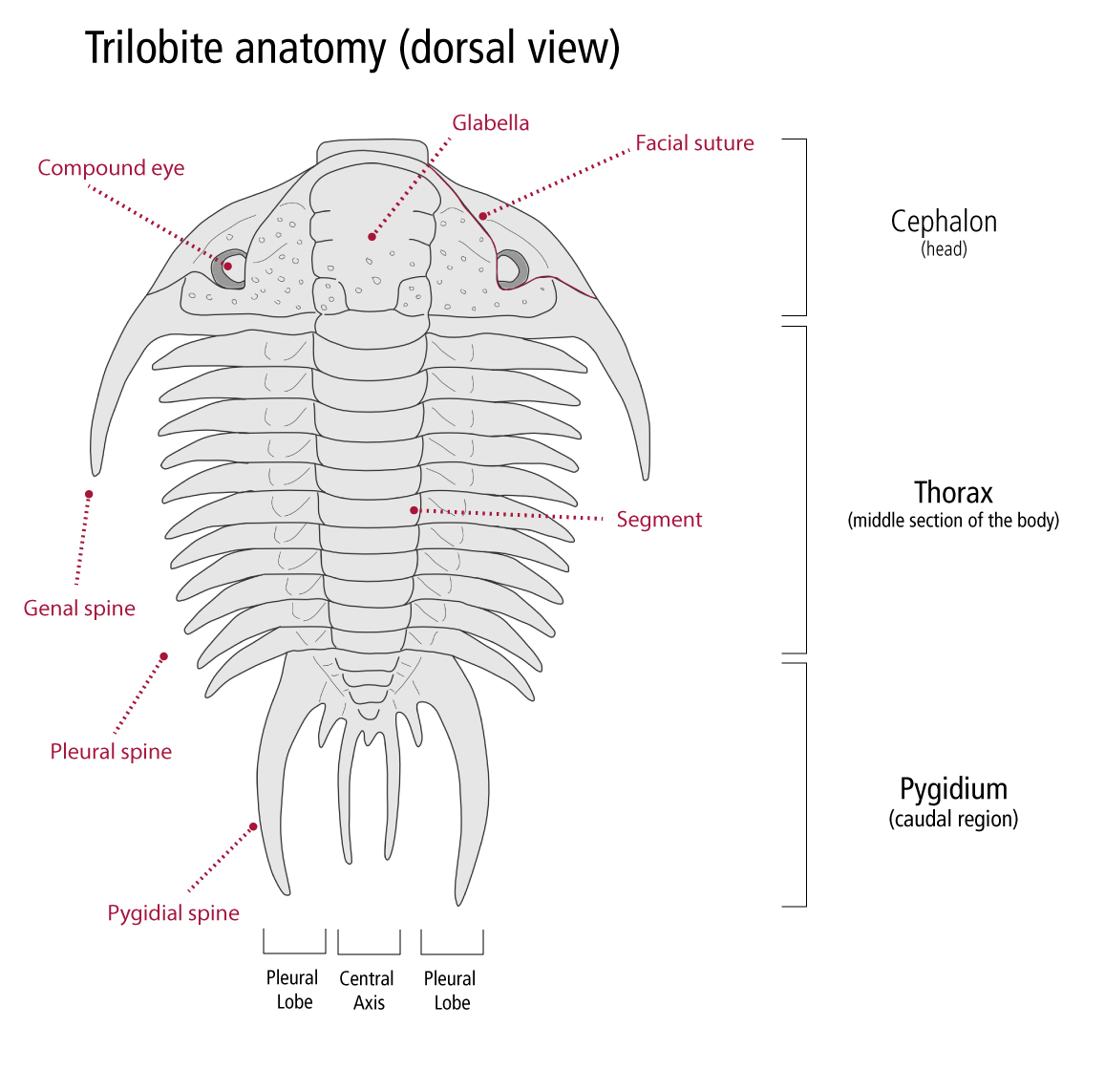
- 15 Sep 2024
In News:
A new study finds that a trilobite species with exceptionally well-preserved fossils from upstate New York has an additional set of legs underneath its head.
Key details:
- The research, led by the American Museum of Natural History and Nanjing University in China, suggests that having a fifth pair of head appendages might be more widespread among trilobites than once thought.
- Published in the journal Palaeontology, the study helps researchers better understand how trilobite heads are segmented.
Trilobites
- Trilobites are a group of extinct arthropods whose living relatives include lobsters and spiders.
- Like other arthropods, the bodies of trilobites are made up of many segments, with the head region comprised of several fused segments.
- As with other parts of the trilobite body (the thorax and tail), these segments were associated with appendages, which ranged in function from sensing to feeding to locomotion.
- Trilobites are a group of extinct marine arthropods that first appeared around 521 million years ago, shortly after the beginning of the Cambrian period, living through the majority of the Palaeozoic Era, for nearly 300 million years. They died out at the end of the Permian, 251 million years ago, killed by the end Permian mass extinction event that removed over 90% of all species on Earth. They were very diverse for much of the Palaeozoic, and today trilobite fossils are found all over the world.
- The name 'trilobite' comes from the distinctive three-fold longitudinal division of the dorsal exoskeleton into a central axis, flanked on either side by lateral (pleural) areas.
Two ways
The segments in the trilobite head can be counted in two different ways: by looking at the grooves (called furrows) on the upper side of the trilobite fossil’s hard exoskeleton, or by counting the pairs of preserved antennae and legs on the underside of the fossil. The soft appendages of trilobites are rarely preserved, though, and when looking at the segments in the trilobite head, researchers regularly find a mismatch between these two methods.
In the new study, researchers examined newly recovered specimens of the exceptionally preserved trilobite Triarthrus eatoni from upstate New York. These fossils, known for the gold shine of the pyrite replacement preserving them, show an additional, previously undescribed leg underneath the head.
Resolving mismatch
By making comparisons with another trilobite species, the exceptionally preserved Olenoides serratusfrom the Burgess Shale in British Columbia, the researchers propose a model for how appendages were attached to the head in relation to the grooves in the exoskeleton.
This model resolves the apparent mismatch and indicates that the trilobite head included six segments: an anterior segment associated with the developmental origin of the eyes and five additional segments, associated with one pair of antennae and four pairs of walking legs, respectively.
PM Gram Sadak Yojana-IV
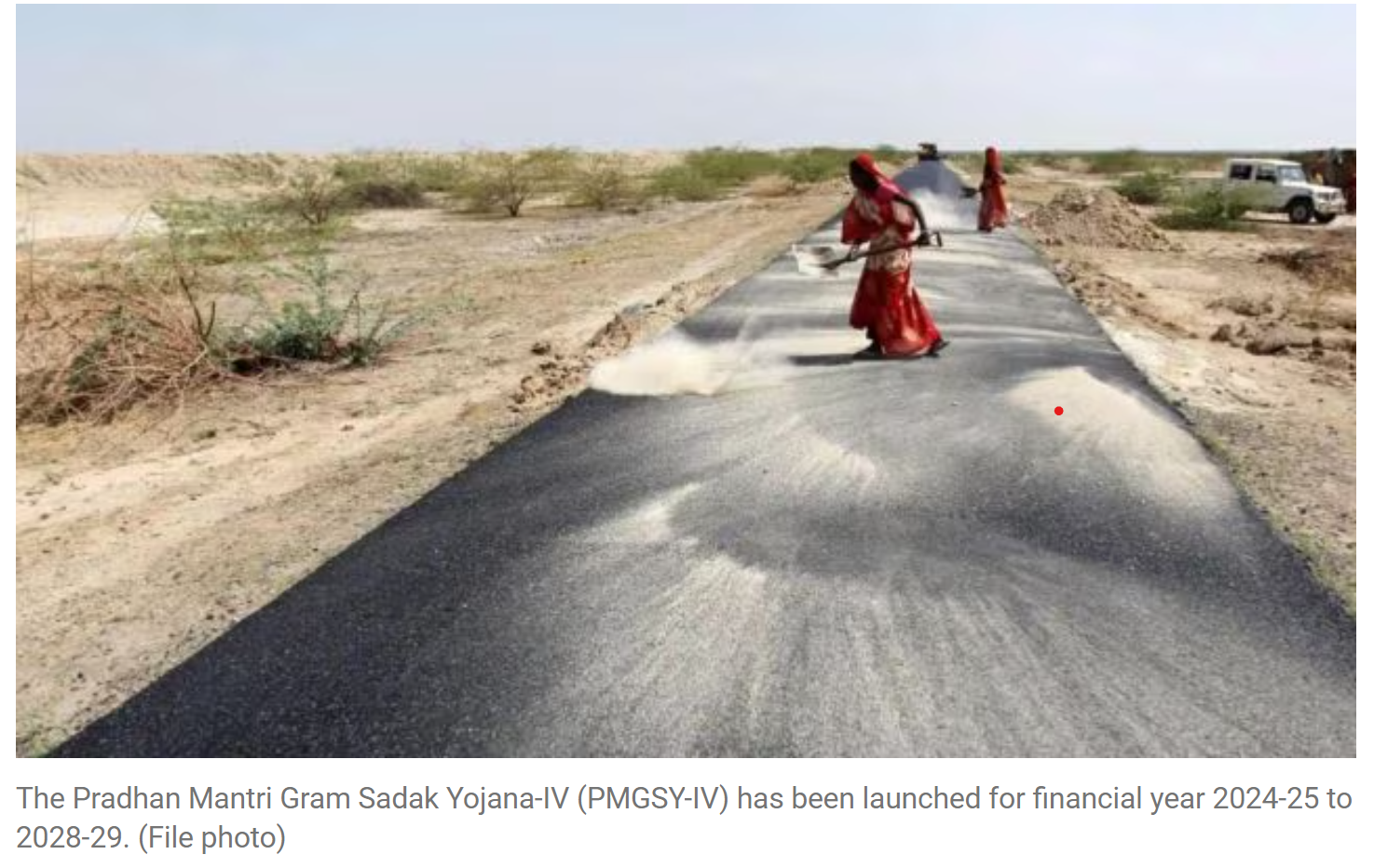
- 15 Sep 2024
In News:
- The Union Cabinet, chaired by the Prime Minister Shri Narendra Modi approved the proposal of the Department of Rural Development for “Implementation of the Pradhan Mantri Gram Sadak Yojana - IV (PMGSY-IV) during FY 2024-25 to 2028-29”.
- The financial assistance is to be provided for the construction of 62,500 Kms road for providing new connectivity to eligible 25,000 unconnected habitations and construction/upgradation of bridges on the new connectivity roads. Total outlay of this scheme will be Rs. 70,125 crore.
Details of the Scheme:
The details of the approval given by the Cabinet are as follows:
- Pradhan Mantri Gram Sadak Yojana -IV is launched for financial year 2024-25 to 2028-29. Total outlay of this scheme is Rs. 70,125 crore (Central Share of Rs. 49,087.50 crore and Sate Share of Rs. 21,037.50 crore).
- Under this scheme 25,000 unconnected habitations of population size 500+ in plains, 250+ in NE & Hill Sates/UTs, special category areas (Tribal Schedule V, Aspirational Districts/Blocks, Desert areas) and 100+ in LWE affected districts, as per Census 2011 will be covered.
- Under this scheme 62,500 Km of all-weather roads will be provided to unconnected habitations. Construction of required bridges along the alignment of the all-weather road will also be provided.
Benefits:
- 25,000 unconnected habitations will be provided all weather road connectivity.
- The all-weather roads will play the role of catalysts for the required socio-economic development and transformation of the remote rural areas. While connecting habitations, the nearby government educational, health, market, growth centers will be connected, as far as feasible, with the all-weather road for the benefit of the local people.
- The PMGSY -IV will incorporate international benchmarks and best practices under road constructions such as Cold Mix Technology and Waste Plastic, Panelled Cement concrete, Cell filled concrete, Full Depth Reclamation, use of construction waste and other wastes such as Fly Ash, Steel Slag, etc.
- PMGSY -IV road alignment planning will be undertaken through the PM Gati Shakti portal. The planning tool on PM Gati Shakti portal will also assist in DPR preparation.
Pradhan Mantri Gram Sadak Yojana (PMGSY)
- PMGSY is a central government scheme launched in 2000 to provide all-weather road connectivity to unconnected rural habitations.
- The scheme was originally a 100% centrally-sponsored initiative, but starting from the financial year 2015-16, the funding has been shared between the Central and State governments in a 60:40 ratio.
National Florence Nightingale Awards 2024
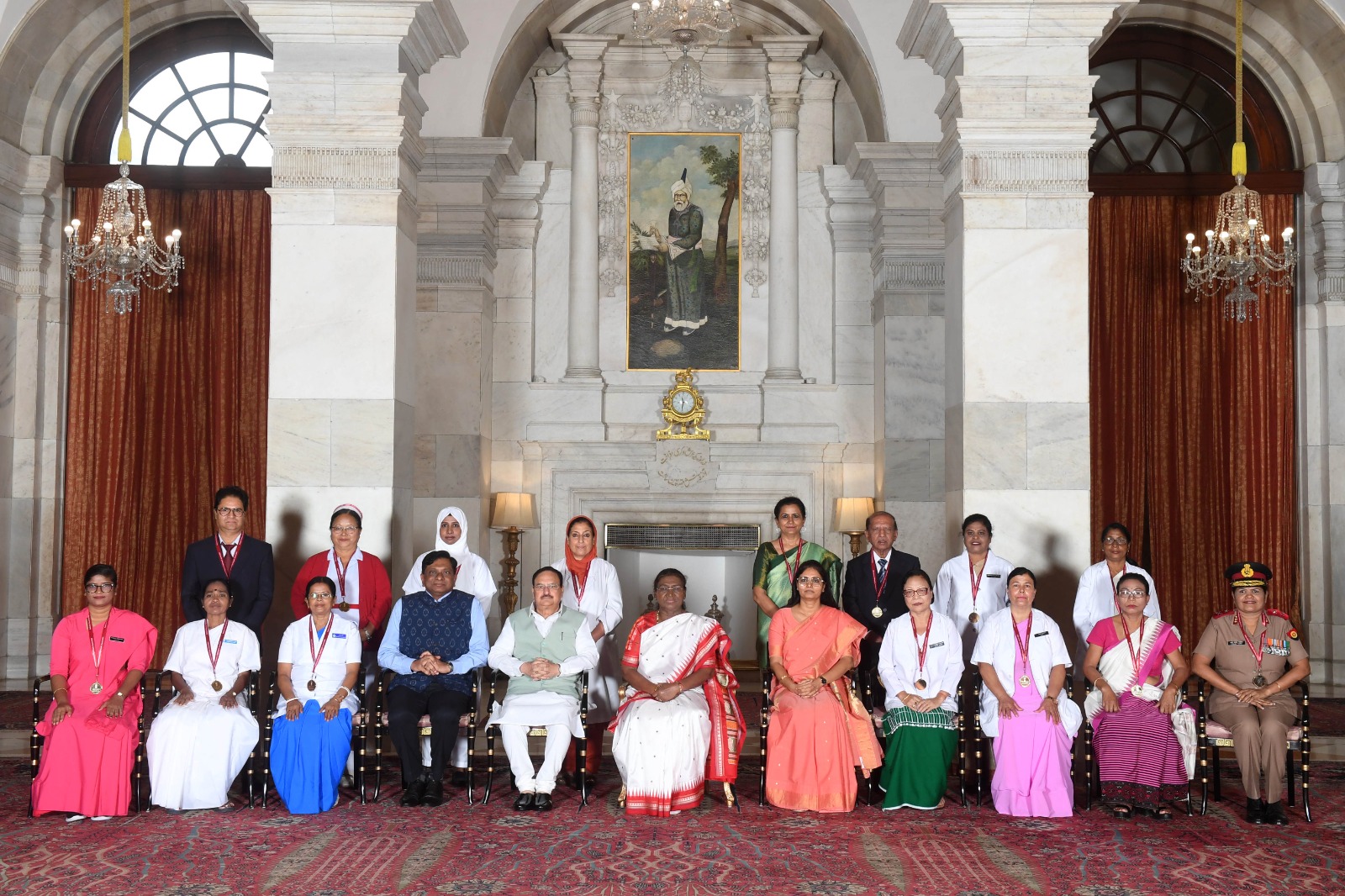
- 15 Sep 2024
In News:
President Droupadi Murmu honored 15 exemplary nursing professionals with the National Florence Nightingale Awards 2024, recognizing their extraordinary healthcare service.
Key Details:
- The National Florence Nightingale Award was instituted by the Ministry of Health and Family Welfare, Government of India in the year 1973 as a mark of recognition for the meritorious services rendered by the nurses and nursing professionals to the society.
- A total of 15 awards are given in the category of registered auxiliary nurses and midwife, registered nurses and midwife and registered lady visitor, the statement said.
- The award is given to outstanding nursing personnel employed in central, states and Union territories and voluntary organisations.
- The nurse in her/his regular job in the hospital or community settings, educational or administrative setting is eligible for the national award.
- Each award consists of a Certificate of Merit, a cash award of ? 1,00,000 and a medal.
A Legacy of Florence Nightingale
- The National Florence Nightingale Awards, are named in honor of Florence Nightingale, the founder of modern nursing.
- Nightingale’s pioneering work during the Crimean War laid the foundation for professional nursing, and her relentless efforts in promoting hygiene and compassionate care revolutionized healthcare practices worldwide.
- In her honor, International Nurses Day is celebrated every year on May 12, her birthday.
Chamran-1 satellite
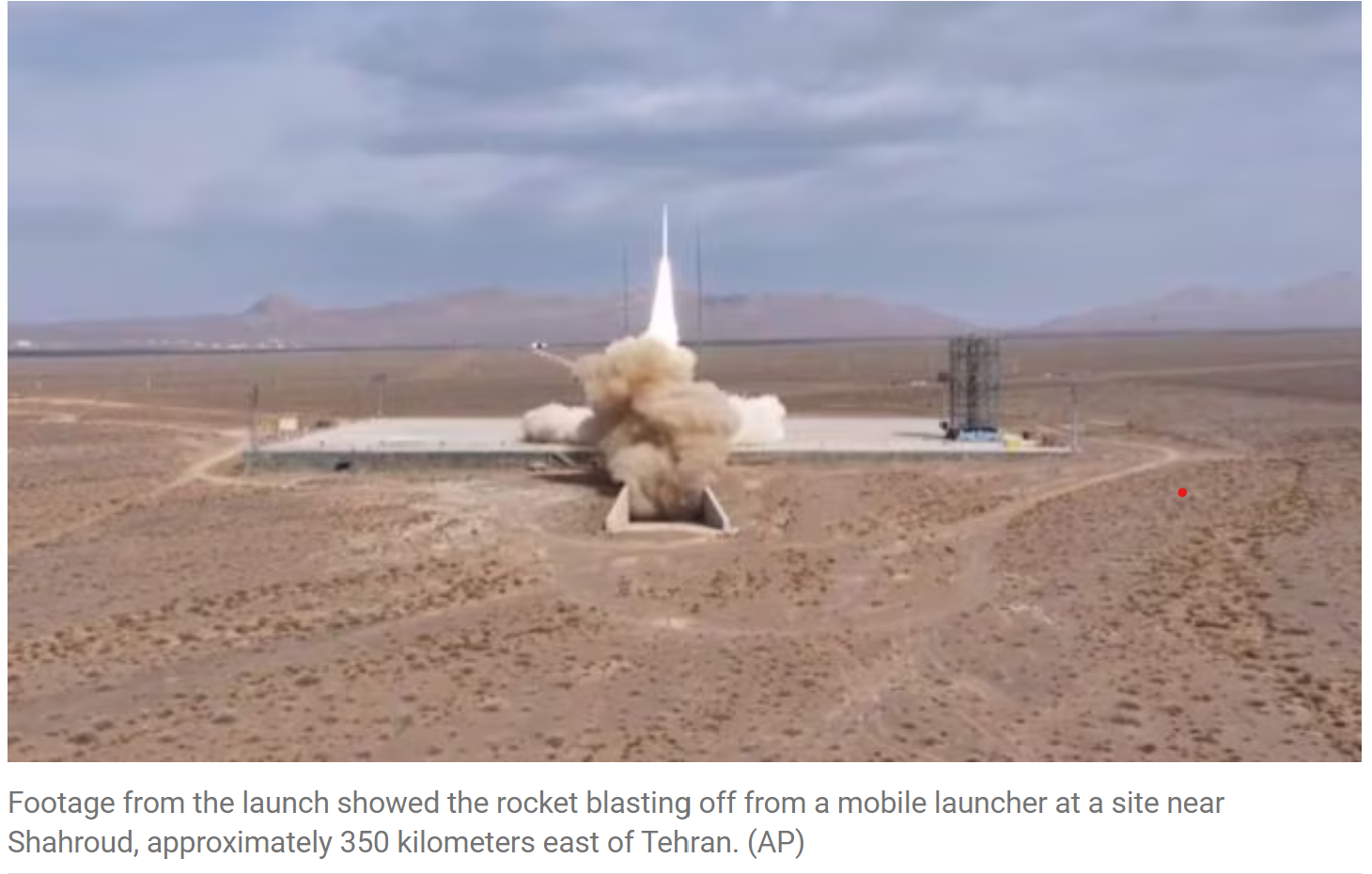
- 15 Sep 2024
In News:
Iran successfully launched its Chamran-1 research satellite into orbit, utilising the Qaem-100 rocket developed by the paramilitary Revolutionary Guard.
Key Highlights:
- Satellite Details: Chamran-1, a research satellite, was designed and manufactured by Iranian engineers at Iran Electronics Industries (SAIran) in collaboration with the Aerospace Research Institute and private firms. It weighs approximately 60 kilograms.
- Launch Vehicle: The satellite was launched into orbit using the Ghaem-100, Iran's first three-stage solid-fuel space launch vehicle (SLV), developed by the Aerospace Force of the Islamic Revolutionary Guard Corps (IRGC).
- Mission Objectives: The primary mission of Chamran-1 is to test hardware and software systems for validating orbital maneuver technology. Additionally, it aims to assess the performance of cold gas propulsion subsystems and evaluate navigation and attitude control subsystems.
- Orbit Details: The satellite was placed into a 550-kilometer (341 miles) orbit above Earth.
What are Intercontinental ballistic missiles?
- Intercontinental ballistic missiles (ICBMs) are a type of ballistic missile with a range greater than 5,500 kilometers and are primarily designed to deliver nuclear warheads.
- They can carry conventional, chemical, and biological weapons, although the latter types have rarely been deployed on ICBMs.
- The United States, Russia, China, France, India, the United Kingdom, Israel, and North Korea are known to possess operational ICBMs, with Pakistan being the only nuclear-armed state that does not have them.
Operation Sadbhav
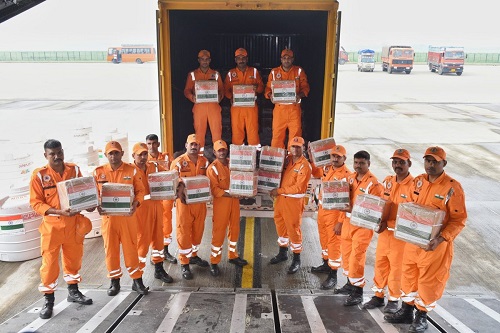
- 15 Sep 2024
In News:
India has launched Operation Sadbhav to deliver crucial humanitarian aid to Myanmar, Laos, and Vietnam, all of which have been devastated by Typhoon Yagi. This powerful storm, the most severe in Asia this year, has led to extensive flooding and widespread destruction across the affected countries.
Relief Efforts:
In response to the crisis, India has mobilized a significant amount of aid. The Indian naval ship INS Satpura has transported 10 tonnes of relief supplies, including dry rations, clothing, and medicines, to Myanmar. Concurrently, the Indian Air Force has dispatched a military transport aircraft with 35 tonnes of aid to Vietnam and an additional 10 tonnes to Laos. The aid includes essential items such as generators, water purification systems, hygiene kits, mosquito nets, blankets, and sleeping bags, which are crucial for addressing immediate needs during this emergency.
India's Proactive Approach:
Operation Sadbhav highlights India's proactive approach to humanitarian assistance and disaster relief, emphasizing its role as a leading responder in the region. This initiative reflects India's commitment to providing support to its neighboring countries in times of crisis and aligns with its broader 'Act East Policy,' which aims to strengthen relations with ASEAN member states through practical assistance and cooperation.
Strategic Importance:
The operation also underscores India's strategic goals of enhancing regional stability and reinforcing its position as a reliable partner in disaster management. By providing timely aid, India demonstrates its dedication to supporting regional stability and contributing to international humanitarian efforts.
Global Recognition and Cooperation:
India's response to Typhoon Yagi has received international acknowledgment for its effectiveness and promptness. The coordination of these relief efforts highlights the importance of global solidarity in addressing humanitarian crises and building resilience in disaster-affected regions.
Conclusion:
Operation Sadbhav is a clear demonstration of India's commitment to timely and substantial humanitarian assistance. It not only showcases India's proactive diplomacy but also strengthens its ties with ASEAN nations through meaningful cooperation in times of adversity. The ongoing relief efforts are a testament to India's role as a responsible global stakeholder in disaster response and recovery.
What is Operation Kawach, the new ‘war on drugs’ waged by Delhi Police?
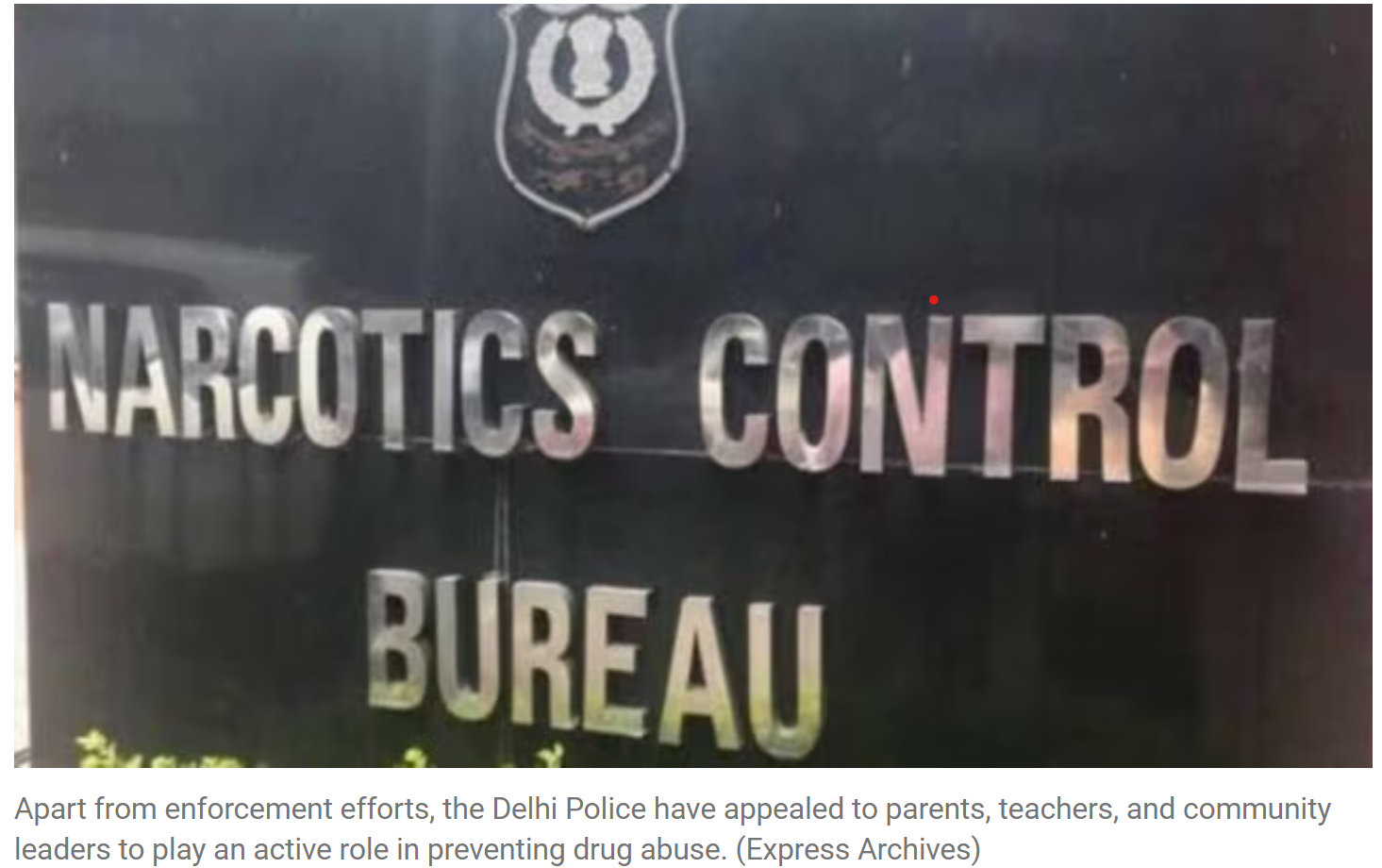
- 05 Sep 2024
Aimed at identifying and apprehending people involved in the trafficking and distribution of narcotics, 'Operation Kawach' is a joint initiative launched by the Crime Branch in coordination with all district units of the Delhi Police.
In a major crackdown on the menace of drugs in the national capital, the Crime Branch of the Delhi Police conducted widespread raids, swooping down on over 100 locations across Delhi. Earlier, raids conducted during the intervening night of May 12 and 13 had led to the arrest of 31 drug offenders in 30 cases under the Narcotic-Drugs and Psychotropic Substances Act 1985.
As many as 12 bootleggers were also arrested in six cases of the Excise Act. The operation also saw the seizure of 957.5 grams of heroin, 57.8 kilograms of marijuana and 782 bottles of illicit liquor.
What is Operation Kawach?
Aimed at identifying and apprehending people involved in the trafficking and distribution of narcotics, ‘Operation Kawach’ is a joint initiative launched by the Crime Branch in coordination with all district units of the Delhi Police. The initiative aims to combat the harmful influence of drug addiction on youth and children and underscores the authorities’ commitment to safeguarding the well-being of young individuals and curbing the distribution of illicit substances in educational settings.
Operation Kawach is primarily intended to save the youth from the menace of drugs. Although the focus is to take stringent action on the supply side, it is also appealed to society to create awareness and reduce the demand of drugs. The parents, teachers and the social reformers are specially requested to sensitise the youth about the grave consequences of drug addiction.
Operation Kawach: The story so far
According to the official, the joint operations, which utilised a variety of resources such as undercover officers, surveillance, canine support and intelligence gathering, targetted both street-level dealers and high-level traffickers and have both ‘top-to-bottom’ and ‘bottom-to-top’ approaches to effectively counter drug trafficking in the national capital.
In this year, Delhi Police has arrested 534 narco-offenders in 412 NDPS cases. Around 35 kg of heroin/smack, 15 kg of cocaine, 1,500 kg of ganja, 230 kg of opium, 10 kg of charas and 20 kg of poppy have been recovered during these operations.
Black Coat Syndrome
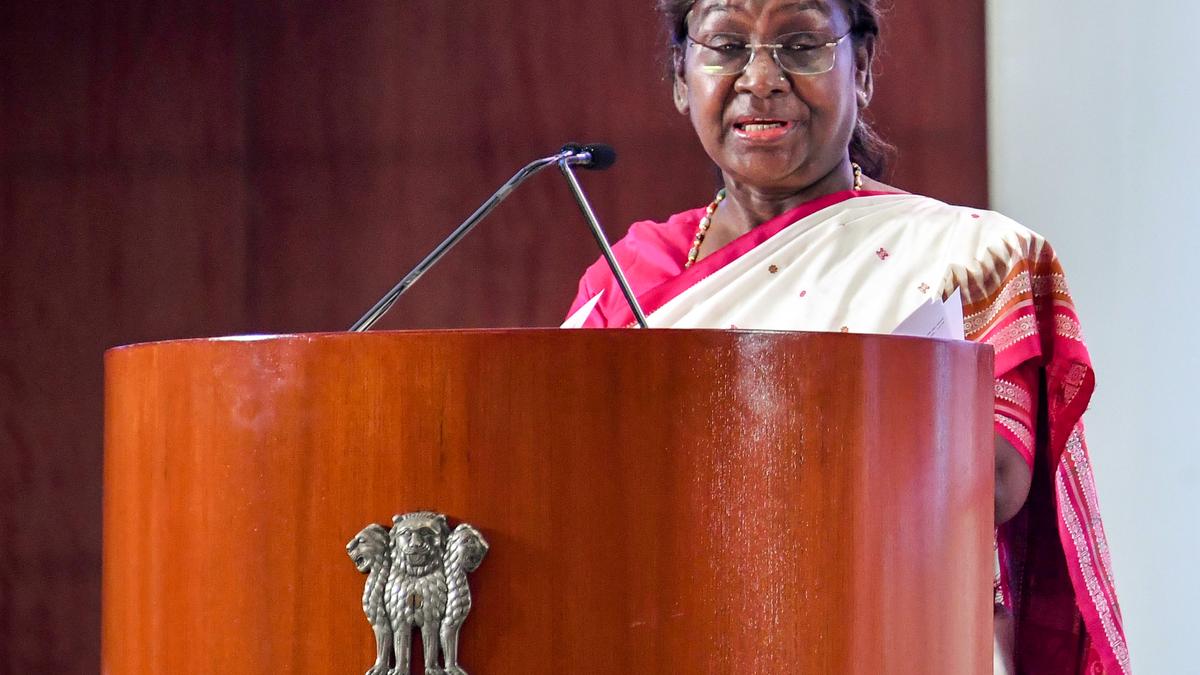
- 05 Sep 2024
In News:
In her recent speech at the National Conference of District Judiciary, President Droupadi Murmu introduced the concept of 'black coat syndrome' to address the persistent issue of case delays in Indian courts. This term is intended to reflect the anxiety and reluctance that people experience when dealing with the judicial system, similar to the 'white coat syndrome' seen in medical settings.
Current Challenges in India's Judicial System
- Case Pendency: As of October 2023, there are over five crore cases pending across various levels of the judiciary in India. The current number of judges—20,580—falls short of effectively managing this caseload.
- Infrastructure Deficiencies: Many courts lack essential infrastructure and modern technology. For example, as of September 2023, 19.7% of district courts did not have separate toilets for women.
- Judicial Vacancies: There are notable vacancies in the judiciary. High courts have 347 unfilled positions out of a total of 1,114 sanctioned posts. Similarly, 5,300 out of 25,081 district judge positions are vacant.
- Gender Representation: The Supreme Court has three female judges, making up 9.3% of its bench. High courts have 103 female judges, representing 13.42%, while the district judiciary has a more balanced representation with 36.33% female judges.
Ongoing Initiatives to Address Judicial Challenges
- Technological Advancements:
- e-SCR (Electronic Supreme Court Reports): Provides digital access to Supreme Court judgments.
- Virtual Court System: Facilitates court proceedings through videoconferencing.
- eCourts Portal: Serves as a comprehensive platform for interaction among litigants, advocates, government bodies, and the public.
- National Judicial Data Grid (NJDG): Makes case statistics available at various levels for public and research use.
- Legal Reforms and Alternative Dispute Resolution (ADR):
- National Mission for Justice Delivery and Legal Reforms (2011): Focuses on improving justice access by tackling delays and arrears.
- ADR Methods: Includes Lok Adalats, Gram Nyayalayas, and Online Dispute Resolution to expedite justice.
- Commercial Courts Act 2015: Enforces pre-institution mediation for commercial disputes.
- Fast Track Courts: Designed to speed up cases involving serious crimes, senior citizens, women, and children.
Strategies for Future Improvement
- Increasing Court Efficiency: The Chief Justice of India has stressed the need for courts to function beyond their current capacity of 71% to better align case disposal with new case inflows.
- Filling Judicial Positions: With 28% of district court positions vacant, a regularized recruitment schedule is suggested to address these gaps. Additionally, integrating judicial recruitment on a national scale is recommended to reduce regional biases.
- Enhancing Case Management: Establish District-Level Case Management Committees to better manage cases by reconstructing records and identifying priority cases. Encouraging pre-litigation dispute resolution can also help manage the case backlog.
- Adjusting Judicial Vacations: The 2003 Malimath Committee report proposed reducing vacation periods to help address the backlog of cases.
- Bridging Judiciary Gaps: Addressing the disparity between district courts and high courts is crucial to create a more cohesive and unified judicial system.
Poshan Tracker Initiative
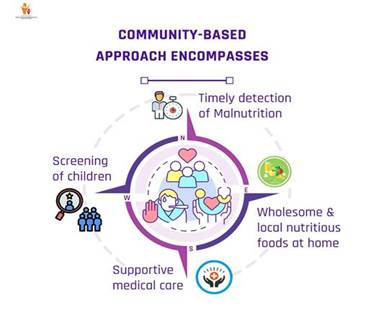
- 05 Sep 2024
In News:
The Ministry of Women and Child Development recently earned the National Award for e-Governance 2024 (Gold) for its Poshan Tracker initiative, which has made significant strides in enhancing child health and nutrition.
About the Poshan Tracker Initiative
The Poshan Tracker initiative focuses on identifying and addressing growth-related issues in children aged 0-6 years. By using real-time monitoring and WHO growth charts, the program ensures that children receive optimal nutrition.
Key components of the initiative include:
- Role of Anganwadi Workers (AWWs): These workers are essential in assessing children's health and implementing necessary interventions when deviations from expected growth are observed.
- Technology Integration: The program employs advanced ICT tools and Growth Measuring Devices (GMD) at Anganwadi Centers (AWCs) to enable precise data collection and regular monitoring.
- Impact: Real-time growth monitoring through the Poshan Tracker has substantially improved child health outcomes in India, benefiting millions of children under the Mission Poshan 2.0 initiative.
Key Features of the Poshan Tracker App
- Comprehensive Overview: The app offers a complete view of Anganwadi Centre activities, including service deliveries and beneficiary management for pregnant women, lactating mothers, and children under six.
- Digitization and Automation: It replaces physical registers used by workers with digital records, thereby enhancing the quality and efficiency of their work.
- Smartphone Provision: Anganwadi workers have been provided with smartphones through the Government e-Market (GeM) to streamline service delivery.
- Technical Support: Each state has a designated nodal person to provide technical assistance and resolve issues related to the Poshan Tracker application.
- Service Accessibility: Migrant workers who registered in their original state can access services at the nearest Anganwadi in their current location.
RHUMI-1
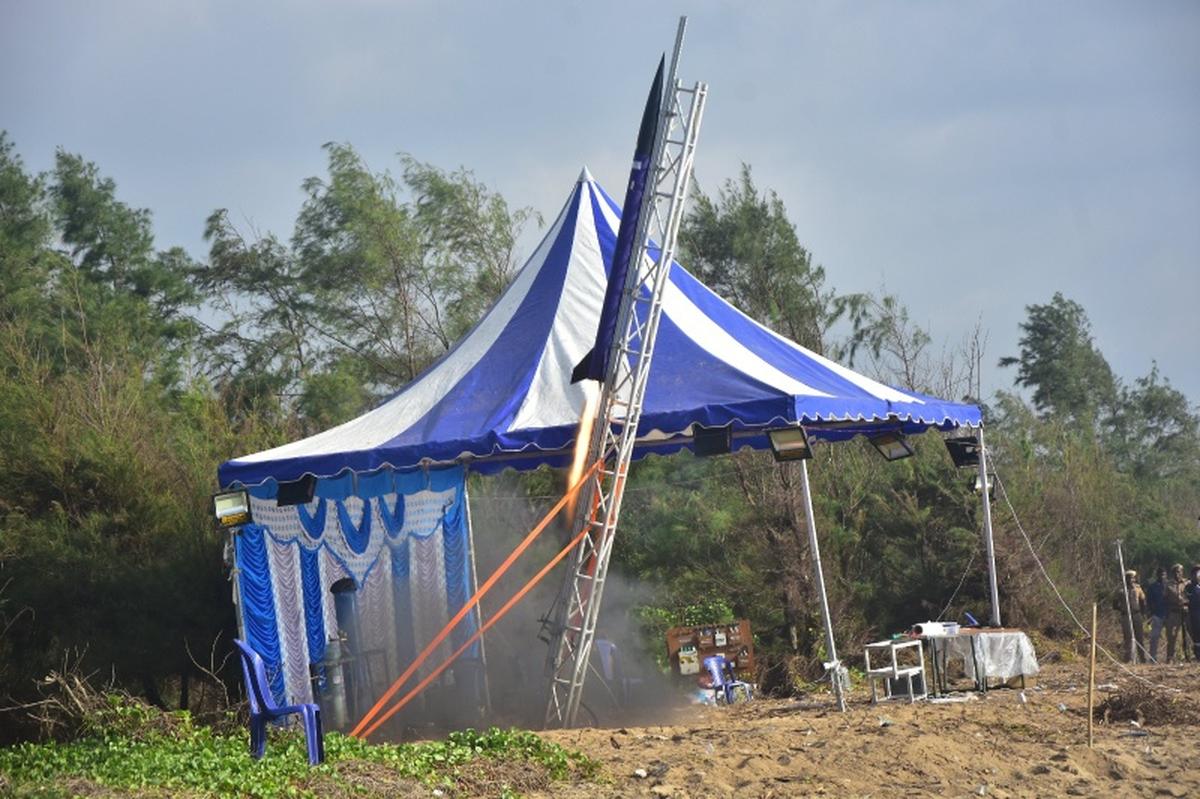
- 05 Sep 2024
In News:
India recently celebrated the launch of its first reusable hybrid rocket, RHUMI-1, developed by the Tamil Nadu-based start-up Space Zone India in collaboration with the Martin Group. The launch took place on August 24, 2024, from Thiruvidandhai in Chennai. This innovative rocket was propelled into a suborbital trajectory using a mobile launcher, carrying three Cube Satellites and fifty Pico Satellites designed to gather data on global warming and climate change.
Key Features of RHUMI-1:
- Hybrid Propulsion System: RHUMI-1 utilizes a combination of solid and liquid propellants, which enhances efficiency and lowers operational costs.
- Adjustable Launch Angle: The rocket's engine allows for precise trajectory control with adjustable angles ranging from 0 to 120 degrees.
- Electrically Triggered Parachute System: Equipped with an advanced and eco-friendly descent mechanism, this system ensures safe recovery of rocket components, offering both cost-effectiveness and environmental benefits.
- Environmentally Friendly: RHUMI-1 is entirely free of pyrotechnics and TNT, underlining its commitment to sustainability.
Reusable Launch Vehicles (RLVs):
Reusable Launch Vehicles are spacecraft designed to be launched, recovered, and reused multiple times. They offer several advantages:
- Cost Savings: RLVs can be up to 65% cheaper than constructing a new rocket for every launch.
- Reduced Space Debris: By minimizing discarded rocket components, RLVs help reduce space debris.
- Increased Launch Frequency: Shorter turnaround times allow for more frequent use of the rocket.
Unlike traditional multi-stage rockets, where the first stage is discarded after fuel depletion, RLVs recover and reuse the first stage. After separation, the first stage returns to Earth using engines or parachutes for a controlled landing.
Background on Space Zone India and Recent Missions:
Space Zone India is an aero-technology company based in Chennai, focusing on providing cost-effective, long-term solutions in the space industry. They offer hands-on training in aerodynamic principles, satellite technology, drone technology, and rocket technology while raising awareness about careers in the space sector. In 2023, Space Zone India conducted the "Dr. A.P.J Abdul Kalam Students Satellite Launch Mission," involving over 2,500 students from various schools across India. This mission resulted in the creation of a student satellite launch vehicle capable of carrying a payload of 150 Pico Satellites for research experiments.
Disaster Management (Amendment) Bill, 2024
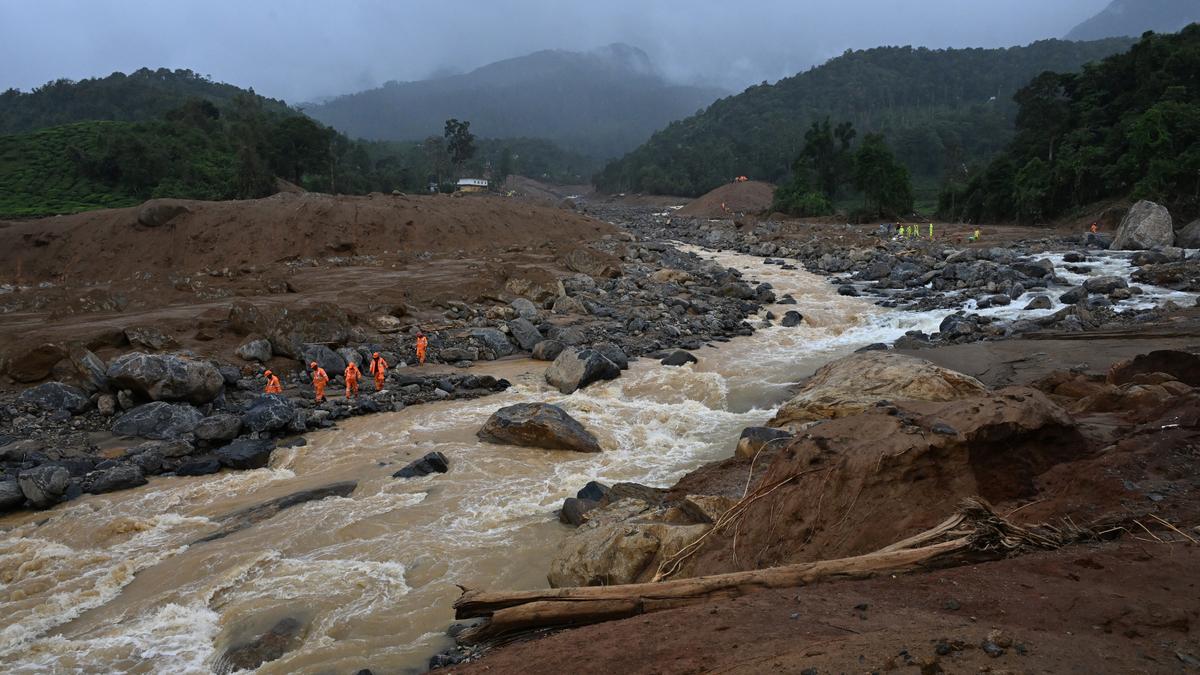
- 05 Sep 2024
In News:
On August 1, 2024, the central government introduced the Disaster Management (Amendment) Bill in the Lok Sabha. This Bill, aimed at amending the existing Disaster Management Act of 2005, has been proposed in response to the increasing frequency of climate-induced disasters. However, the Bill’s provisions have raised concerns about further centralisation of disaster management processes, which may complicate and delay disaster response efforts.
Centralisation Concerns
The Bill continues the trend of centralising disaster management, a feature already prevalent in the 2005 Act. It grants statutory status to existing bodies like the National Crisis Management Committee (NCMC) and the High-Level Committee (HLC), potentially complicating the disaster response process. This centralised approach has previously led to delays, such as the late disbursement of funds to Tamil Nadu and Karnataka, contrary to the Act's intended rapid response.
Proposed Changes
Strengthening NDMA and SDMAs: The Bill aims to bolster the role of the National Disaster Management Authority (NDMA) and State Disaster Management Authorities (SDMAs) by having them prepare disaster management plans directly. It also introduces Urban Disaster Management Authorities (UDMAs) for state capitals and major cities, although these bodies may face challenges due to insufficient financial devolution.
Database and Staffing: The Bill mandates the creation of comprehensive disaster databases at national and state levels and allows the NDMA to appoint its own staff, subject to central government approval.
Issues with the Current Definition of ‘Disaster’
Heatwaves Exclusion: On July 25, 2024, the Minister of State for Science, Technology, and Earth Sciences announced that heatwaves will not be classified as a notified disaster under the Act. This decision aligns with the 15th Finance Commission’s view and maintains a restricted list of disasters eligible for assistance, which includes cyclones, droughts, earthquakes, and floods, but excludes climate-induced phenomena like heatwaves.
Inadequate Definition: The existing definition of "disaster" in the Act and the Bill remains narrow, failing to encompass climate-induced events such as heatwaves, which are increasingly recognized globally as significant disasters. Data from the India Meteorological Department shows a record number of heatwave days and related fatalities, highlighting the need for a broader disaster definition.
Critical Issues
Central-State Dynamics: The Bill’s centralisation raises questions about the balance of power between central and state governments. There are concerns that states will remain heavily dependent on central funds, complicating disaster management and response.
Lessons Unlearned: Despite being an update to the 2005 Act, the Bill appears to overlook past shortcomings, including delays in financial preparedness and response. A focus on cooperative federalism and effective disaster management should prioritize practical solutions over a central versus state blame game.
Future Directions: Addressing the challenges of climate-induced disasters and ensuring effective financial and operational preparedness requires revisiting and refining the disaster management framework. Emphasizing cooperative federalism and proactive disaster management strategies will be crucial in improving disaster resilience and response in the face of escalating climate risks.
India-France Bilateral Naval Exercise VARUNA

- 07 Sep 2024
In News:
The 22nd edition of the India-France bilateral naval exercise, VARUNA, took place in the Mediterranean Sea from September 2 to 4, 2024. This exercise highlights the strong maritime partnership between the Indian Navy and the French Navy, showcasing their commitment to enhancing interoperability and operational effectiveness.
Key Highlights:
- Participating Vessels and Aircraft:
- Indian Navy:
- INS Tabar: A frontline stealth frigate commanded by Captain MR Harish.
- Ship-borne Helicopter: Provided air support during the exercises.
- LRMR Aircraft P-8I: An advanced long-range maritime reconnaissance aircraft.
- French Navy:
- FS Provence: A French naval ship participating in the exercise.
- Submarine Suffren: A French attack submarine.
- Aircraft F-20: Providing air support.
- Atlantique 2: A French maritime patrol aircraft.
- Fighters MB339: Multi-role fighter aircraft.
- Helicopters NH90 and Dauphin: Providing additional aerial capabilities.
- Indian Navy:
- Exercise Activities:
- Tactical Maneuvers: Advanced maneuvers showcasing the operational capabilities of both navies.
- Anti-Submarine Warfare: Exercises designed to enhance capabilities in detecting and countering submarines.
- FLYEX (Flight Exercises): Coordinated air operations involving various aircraft.
- Air Defence Exercise: Training in defending against aerial threats.
- Live Weapon Firings: Demonstrations of weapon systems in action.
- PHOTO-EX (Photographic Exercise): Exercises designed for documenting and assessing naval operations.
- Steam Past: A ceremonial maneuver showcasing the participating ships.
- Significance of the Exercise:
- Evolution of VARUNA: Since its inception in 2001, VARUNA has become a key component of the India-France naval relationship. The exercise has evolved to improve interoperability and share best practices between the two navies.
- Strategic Importance: Conducting the exercise in the Mediterranean Sea reflects the Indian Navy's capability and commitment to operate far beyond the Indian Ocean Region (IOR). It underscores the strategic depth and outreach of the Indian Navy.
- Enhanced Interoperability: VARUNA demonstrates the mutual commitment of India and France to enhancing naval collaboration and operational effectiveness through joint exercises and shared experiences.
- Future Outlook:
- Commitment to Partnerships: The Indian Navy continues to prioritize building strong partnerships with like-minded navies worldwide. The VARUNA exercise is a testament to this ongoing commitment and the broader strategic goals of both India and France in strengthening maritime security and cooperation.
This bilateral exercise not only enhances the operational capabilities of both navies but also reinforces the strategic partnership between India and France in the maritime domain.
India-Maldives Defence Talks
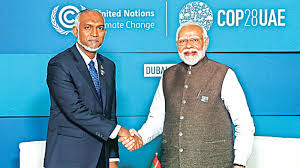
- 07 Sep 2024
In News:
- India and the Maldives held their first defence talks since India withdrew its military personnel early this year.
Significance of Talks:
- The dialogue is notable given recent tensions in bilateral relations. Relations soured after President Mohamed Muizzu's election on an "India Out" platform, leading to the withdrawal of Indian troops. The last defence cooperation dialogue was held in March 2023 under President Ibrahim Solih.
Discussion Topics:
-
- Expediting ongoing defence cooperation projects.
- Planning forthcoming bilateral military exercises.
- Enhancing high-level exchanges and capability development.
Context of Tensions:
-
- Mohamed Muizzu, who took office in November 2023, had called for the removal of Indian military personnel, a significant shift from the previous administration’s stance.
- India agreed to withdraw 80 military personnel between March and May 2024. Indian technical personnel now operate key equipment like helicopters and a Dornier aircraft in the Maldives.
Recent Developments:
-
- Maldives Foreign Minister Moosa Zameer visited India in May.
- President Muizzu attended PM Narendra Modi’s swearing-in ceremony in June.
- In August, Indian External Affairs Minister S. Jaishankar visited the Maldives to reaffirm bilateral ties.
Historical Defence Cooperation:
-
- India gifted a Dornier aircraft to the Maldives in 2020 and a patrol vessel in 2019.
- India provided a coastal radar system last year and laid the foundation for the 'Ekatha Harbour' project, enhancing Maldivian Coast Guard capabilities.
Ongoing Projects:
-
- Greater Male Connectivity Project (GMCP) - a $500 million initiative financed by India.
- Building a new Coast Guard base at Uthuru Thilafalhu (UTF) atoll.
- India’s grant for High Impact Community Development Projects (HICDPs).
Strategic Importance:
-
- For Maldives: India is a key security partner and crisis responder, with historical assistance during emergencies (Operation Neer, Vaccine Maitri). Maldives seeks to restore Indian tourist numbers, vital for its economy.
- For India: The Maldives is crucial to India's Neighbourhood First Policy and Vision SAGAR. Its strategic location between major Indian Ocean chokepoints makes it a vital partner for maritime security and countering China's influence.
Recent Changes:
-
- The Muizzu government decided not to renew a 2019 MoU for hydrographic surveying with India, ending joint hydrographic surveys conducted under the pact.
Travel and Trade:
-
- Both countries benefit from an open skies arrangement and visa-free access for tourism, medical, and business purposes
India-Middle East-Europe Economic Corridor (IMEC)
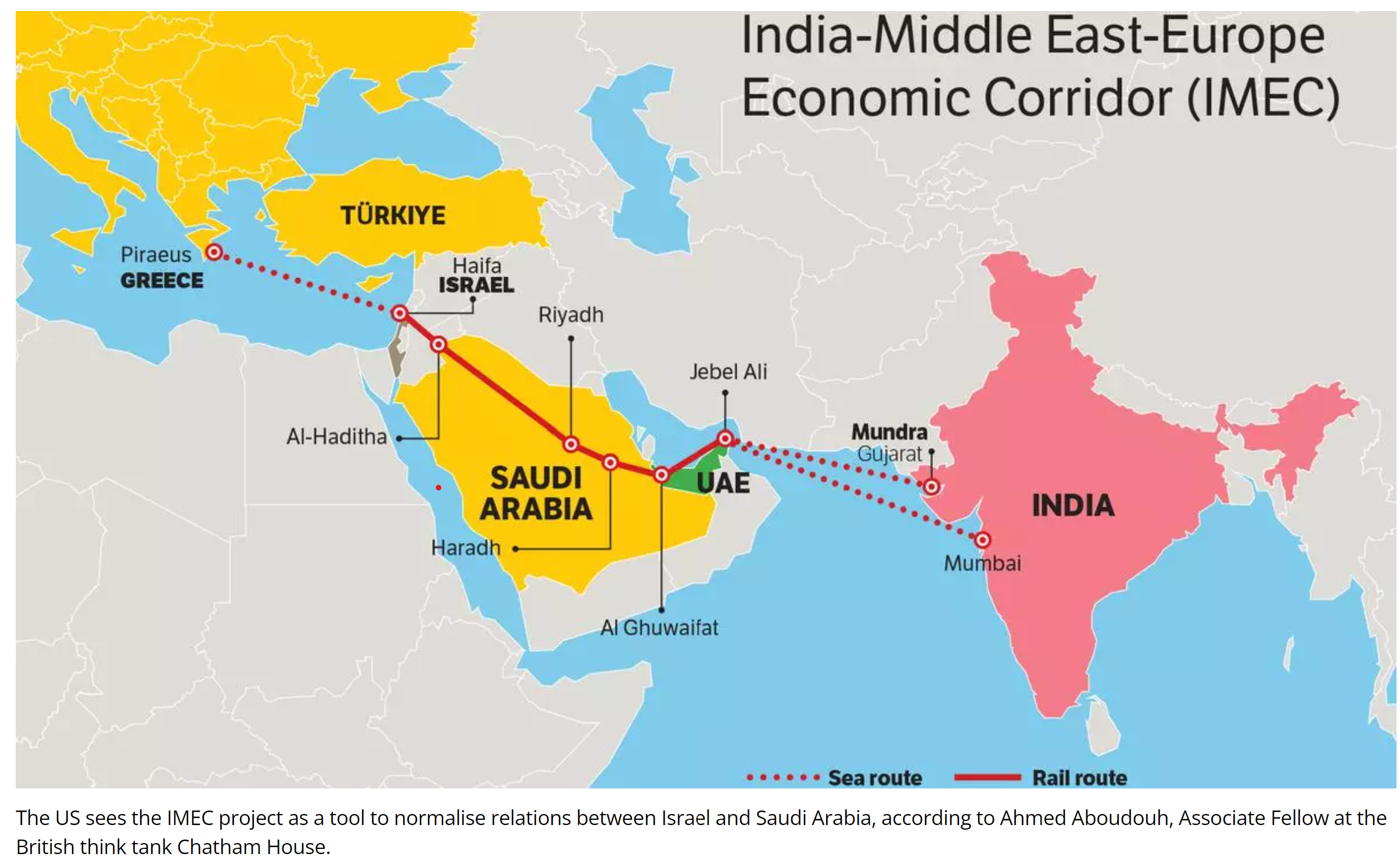
- 07 Sep 2024
In News:
IMEC is an important initiative that can add to India's maritime security and faster movement of goods between Europe and Asia, said Union Minister of Commerce & Industry at the Confederation of Indian Industry (CII) India-Mediterranean Business Conclave 2024 in New Delhi.
Key Details:
- Corridors:
- East Corridor: Connects India to the Gulf.
- Northern Corridor: Links the Gulf to Europe.
- Components:
- Railroad: Provides a reliable and cost-effective cross-border ship-to-rail transit network.
- Ship-to-Rail Networks: Integrates road, sea, and rail transport routes.
- Road Transport: Complements the overall transport infrastructure.
- Expected Benefits:
- Increased Efficiency: Enhances transit efficiency and reduces costs.
- Economic Unity: Promotes economic integration and job creation.
- Environmental Impact: Lowers greenhouse gas emissions.
- Transformative Integration: Connects Asia, Europe, and the Middle East.
- Additional Features:
- Infrastructure: Includes laying cables for electricity and digital connectivity, and pipes for clean hydrogen export.
- Implementation:
- MoU Commitments: Participants will collaboratively address technical design, financing, legal, and regulatory aspects.
- Action Plan: A meeting is planned within 60 days to develop an action plan with specific timetables.
Geoeconomic Perspective
- Economic Integration and Interdependence:
- Prosperity Through Integration: IMEC aims to foster trade and investment among India, the Middle East, and Europe, potentially leading to mutual prosperity and regional stability.
- Building Bridges: Aligns with the liberal international order by promoting economic interdependence to reduce tensions and create shared interests.
- Support from Major Powers: Backed by the US, Europe, and India, signaling a strong commitment to economic ties and regional stability.
- Economic Potential:
- Infrastructure and Trade Routes: Enhances infrastructure and trade routes, boosting economic activity, trade volumes, and investment opportunities.
- Regional Development: Promotes job creation and development in economically disadvantaged areas along the corridor.
Geopolitical Perspective
- Strategic Rivalry with China:
- Countering the BRI: IMEC is seen as a strategic counterbalance to China's Belt and Road Initiative (BRI), offering an alternative aligned with US, European, and Indian interests.
- Regional Influence: Aims to limit China’s influence in the Middle East and South Asia by establishing a competing corridor.
- Geopolitical Alliances:
- Aligning Interests: Involves strategic partnerships among the US, Europe, and India, reflecting concerns about China’s global strategy and shifting power dynamics.
- Rivalry and Competition: The IMEC could be viewed as a global positioning move, responding to China’s growing influence and securing strategic interests.
Reasons for Joining the IMEC
- Economic Enhancement:
- Boosts Indo-Gulf Relations: Enhances trade and economic ties with the Arab Gulf, addressing infrastructure gaps.
- Regional Connectivity: Links India with key partners like Israel and Jordan, boosting economic opportunities.
- Strategic Trade Routes:
- Alternative Routes: Complements existing routes like Chabahar Port and INSTC, connecting India to southern Eurasia.
- Bypassing Choke Points: Offers a shorter route to Eastern Mediterranean and Western Europe, avoiding strategic choke points.
- Energy and Trade Opportunities:
- Access to Resources: Provides potential access to Eastern Mediterranean gas fields.
- Trade Bloc Connectivity: Links India with the EU and GCC, opening up growth opportunities.
- Geopolitical Aspirations:
- Global Power Ambitions: Supports India’s goal to enhance global influence and integrate with eastern and western neighbors.
- Economic Growth: Leverages economic integration to support development and influence.
- Infrastructure Development:
- Economic Integration: Facilitates infrastructure creation for increased trade volumes and regional stability.
e-Sankhyiki portal
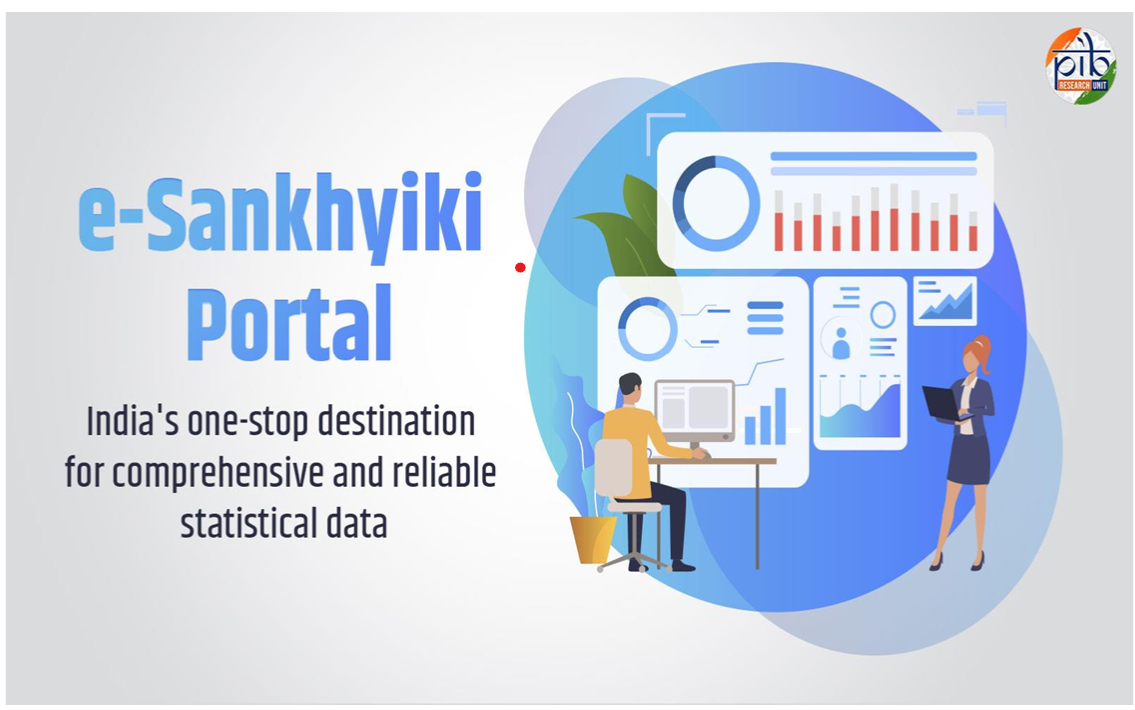
- 07 Sep 2024
In News:
The Ministry of Statistics and Programme Implementation (MoSPI) has launched e-Sankhyiki portal with the objective to establish a comprehensive data management and sharing system for ease of dissemination of official statistics in the country.
Key Highlights:
- Launched on National Statistics Day 2024, the e-Sankhyiki portal is designed to create a comprehensive system for managing and sharing data, facilitating the easy dissemination of official statistics across the country.
- The portal is also accessible at - https://esankhyiki.mospi.gov.in. It aims to provide timely and valuable data inputs for policymakers, researchers, and the general public.
- It provides time series data for key macroeconomic indicators, with features for filtering and visualising the data. Users can also download customised datasets and visualisations and access them through APIs, enhancing the data's reusability.
- It consists of two modules viz. Data Catalogue and Macro Indicators.
- Data Catalogue Module:
- This module catalogues the Ministry’s major data assets, simplifying users' access. It enables searching within datasets and tables, downloading relevant data, and enhancing its value and reusability.
- The Data Catalogue includes seven core data products:
- Consumer Price Index
- Index of Industrial Production
- National Accounts Statistics
- Periodic Labour Force Survey
- Annual Survey of Industries
- Household Consumption Expenditure Survey
- Multiple Indicator Survey.
- It currently hosts over 2,300 datasets, each accompanied by specific metadata and visualisations for user convenience.
- Macro Indicators module:
- This module provides time series data on key macro indicators, featuring tools for filtering and visualising data.
- It allows users to download custom datasets, generate visualisations, and share data through APIs, promoting greater reusability. The initial phase of this module covering data from the past decade includes four major MoSPI products:
- National Accounts Statistics
- Consumer Price Index
- Index of Industrial Production
- Annual Survey of Industries
- The portal currently features over 1.7 million records, providing access to extensive vital data.
- Data Catalogue Module:
Government Initiatives for Safe Data Dissemination
- In response to the rapid data expansion, the Government of India has instituted robust data safety measures. These include storing data in the cloud facilities provided by the National Informatics Centre (NIC), conducting comprehensive security audits of applications, and implementing Secure Sockets Layer (SSL) technology for domain protection.
- Additionally, the government has focused on vulnerability assessments and ensured compliance with guidelines issued by organisations such as NIC and the Indian Computer Emergency Response Team (CERT-In).
- In addition , CERT-In under the Ministry of Electronics and Information technology (MeitY) also undertakes various activities like issuance of advisories and guidelines for cyber/information security, conduct of sensitization programmes/trainings/workshops, operating Cyber Threat exchange platform & Cyber Swachhta Kendra, formulation of a Cyber Crisis Management Plan, setting up of National Cyber Coordination Centre (NCCC) and empanelment of security auditing organisations etc. for data safety.
Rashtriya Poshan Maah 2024
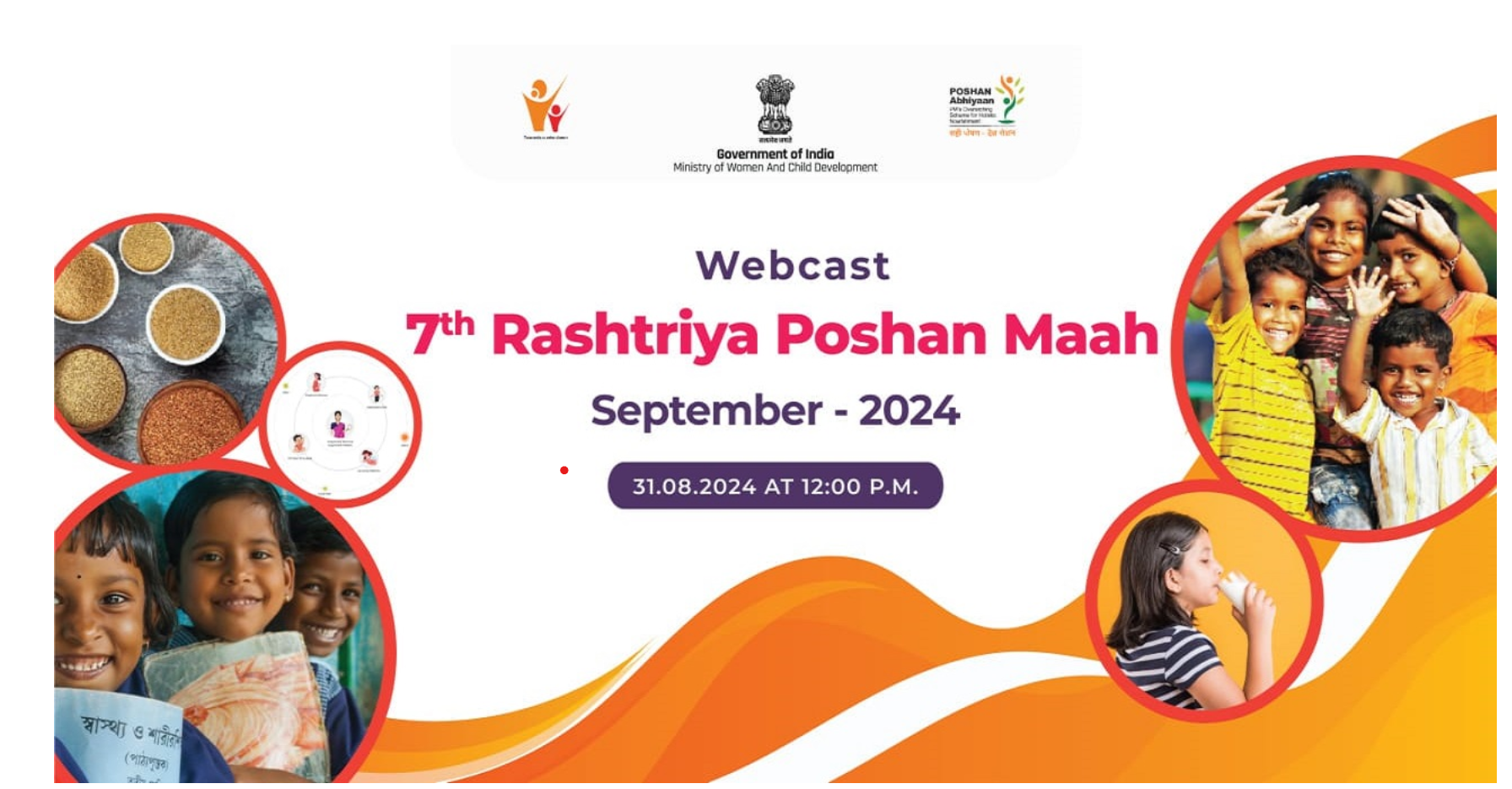
- 06 Sep 2024
In News:
Union Minister of State for Women and Child Development, launched the Rashtriya Poshan Maah 2024 in Dhar district of Madhya Pradesh on 1st September,2024.
Key Highlights:
- As part of the 7th Rashtriya POSHAN Maah, awareness programs are being organized at various levels.
- Under the ICDS (Integrated Child Development Services) Project, complementary feeding activities were conducted at Anganwadi Centres (AWC) Paduck Bagicha, South Andaman.
- Also, at AWC, Champin Nancowrie, Nicobar district (Andaman & Nicobar) under the ICDS Tribal initiative, local food items and nutrition sources were displayed.
- These efforts aim to further the Prime Minister's vision of a ‘Suposhit Bharat’ by conducting diverse large-scale activities, harnessing the potential of Gram Panchayats and Urban Local Bodies.
Rashtriya Poshan Maah:
- The programme is annually celebrated in the month of September, with a different theme each year, primarily focusing on addressing malnutrition by ensuring convergence of various nutrition-related schemes and programmes.
- The objective of the Poshan Maah is to ensure community mobilisation and bolster people’s participation for addressing malnutrition amongst young children, and women and to ensure health and nutrition for everyone.
Poshan Abhiyaan:
- POSHAN Abhiyan (Prime Minister's Overarching Scheme For Holistic Nourishment) focuses on advancing nutritional outcomes for children under six years, adolescent girls, pregnant women, and lactating mothers.
- To cultivate widespread awareness about nutrition at each stage of life, it is celebrated annually as Poshan Maah (1st—30th September) and Poshan Pakhwada (fortnight of March).
- POSHAN Abhiyan (National Nutrition Month) aims to strengthen efforts to end hunger and malnutrition.
- It focuses to improving the nutritional outcomes among children, adolescent girls, pregnant women, and lactating mothers by focusing on prenatal care, diet, and optimal breastfeeding.
- The Ministry of Women and Child Development plans month-long activities under Poshan Maah, focusing on issues such as the hygiene and sanitation, anaemia prevention, maternal and infant health, among others.
- There are outreach programmes, identification drives, camps, and fairs with a special focus on pregnant and lactating women, children below six years, and adolescent girls in order to realise the vision of ‘Swasth Bharat’.
SAMRIDH Scheme
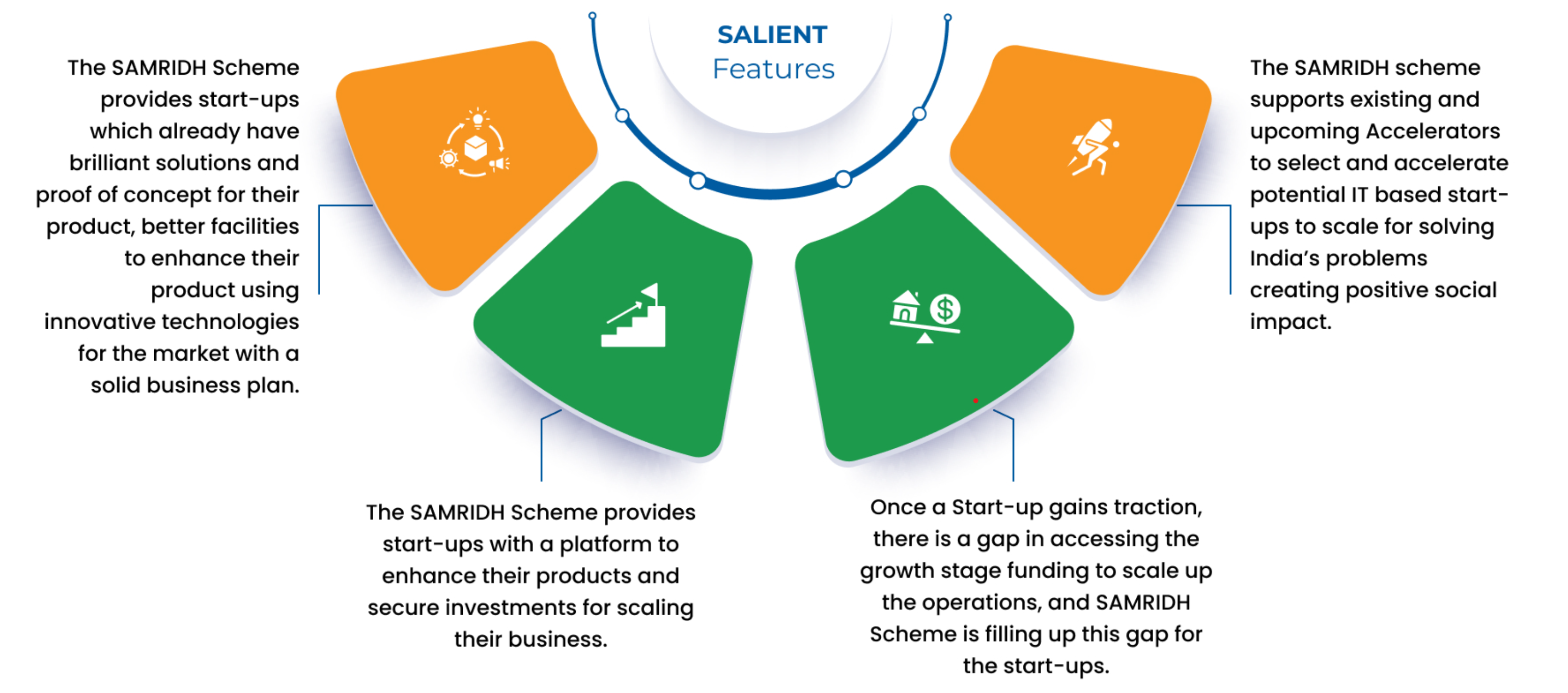
- 06 Sep 2024
In News:
- Ministry of Electronics and Information Technology (MeitY) launches 2nd Cohort of Startup Accelerators of MeitY for Product Innovation, Development and Growth (SAMRIDH).
About SAMRIDH Scheme:
- SAMRIDH is a flagship programme of MeitY for startups acceleration under National Policy on Software Products – 2019.
- The SAMRIDH programme, launched in August 2021 aims to support 300 software product startups with outlay of ?99 crore over a period of 4 years.
- SAMRIDH is being implemented through potential and established accelerators across India which provide services like making products market fit, business plan, investor connect and international expansion to startups plus matching funding upto ?40 lakh by MeitY.
- The scheme is being implemented by MeitY Start-up Hub (MSH), Digital India Corporation (DIC).
- In the first round of cohort, 22 Accelerators spread across 12 states are supporting 175 startups, selected through a multilevel screening process.
- Major Objective:
- The SAMRIDH scheme aims to support existing and upcoming Accelerators to select and accelerate potential IT-based startups to scale.
- Among others, the program focuses on accelerating the startups by providing customer connect, investors connect and connect to international markets
- Eligibility of Accelerator:
- Should be a registered Section-8/Society, [Not-for-Profit Company (eligible to hold equity)] having operations in India.
- The Accelerator and the team are recommended to have more than 3 years of startup experience and should have supported more than 50 start-ups of which at least 10 startups should have received investment from external Investors
- The Accelerator should have an experience of running startup program cohorts with activities listed as desirable under SAMRIDH program.
AgriSURE Fund and Krishi Nivesh Portal
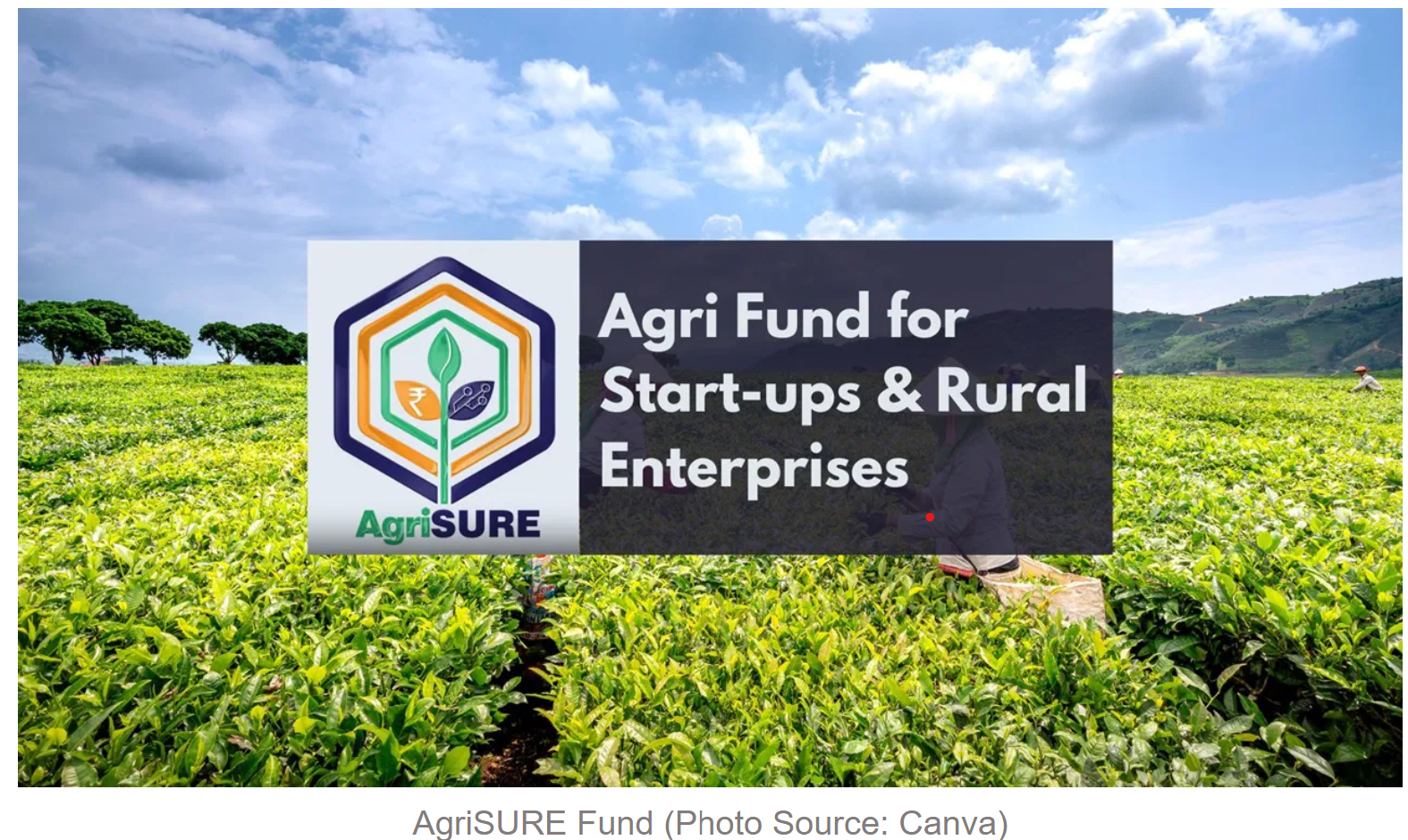
- 04 Sep 2024
In News:
- Recently, the Union agriculture minister Shivraj Singh Chouhan launched two initiatives — a fund aimed at boosting farm-sector startups, and a single-window portal to process investments — as part of a slew of measures being taken by Prime Minister Narendra Modi-led government in its third term to bolster the farm economy.
Key Details:
- AgriSure is a ?750-crore fund established to support agricultural startups.
- Krishi Nivesh Nidhi is a portal designed to expedite the clearance of project proposals.
- Both initiatives aim to enhance farm incomes.
Awards for Credit Disbursal:
- Scheduled banks were recognized for their credit disbursals under the government’s agriculture infrastructure fund.
- First prize: State Bank of India (SBI).
- Second prize: HDFC Bank.
- Third prize: Canara Bank.
Significance of Agriculture Sector:
- Agriculture contributes 16% to India’s GDP.
- Farmers play a crucial role as both producers and consumers in the economy.
PM Modi’s Strategy to Double Farmers’ Incomes:
- The strategy includes:
- Increasing output.
- Reducing input costs.
- Ensuring profitable prices.
- Promoting crop diversification.
- Supporting natural farming.
- Enhancing value addition to crops.
Details of AgriSure Fund:
- Blended capital fund with a total corpus of ?750 crore:
- ?250 crore each from the Department of Agriculture and NABARD.
- ?250 crore to be raised from financial institutions.
- Managed by NabVentures, a subsidiary of NABARD.
- Provides both equity and debt support to startups and agripreneurs.
- Focuses on high-risk, high-impact activities within the agriculture value chain.
Agriculture Infrastructure Fund:
- Mobilized projects worth ?78,000 crore with ?45,000 crore in financing so far.
- Expanded areas of coverage approved by the Union Cabinet on August 28.
- Aims to create durable farm assets, such as warehouses and processing plants.
- Can be used by agricultural produce marketing committees (APMCs) for market facility improvements.
Funding and Loan Details:
- Part of the ?20-lakh crore stimulus package introduced during the Covid-19 pandemic.
- Total funding of ?1 lakh crore over four years:
- ?10,000 crore for 2020-21.
- ?30,000 crore each for the subsequent three financial years.
- Provides medium-to-long term debt financing for rural projects.
- Interest subvention of 3% per annum on loans up to ?2 crore for seven years, with the government covering part of the interest.
eShram portal
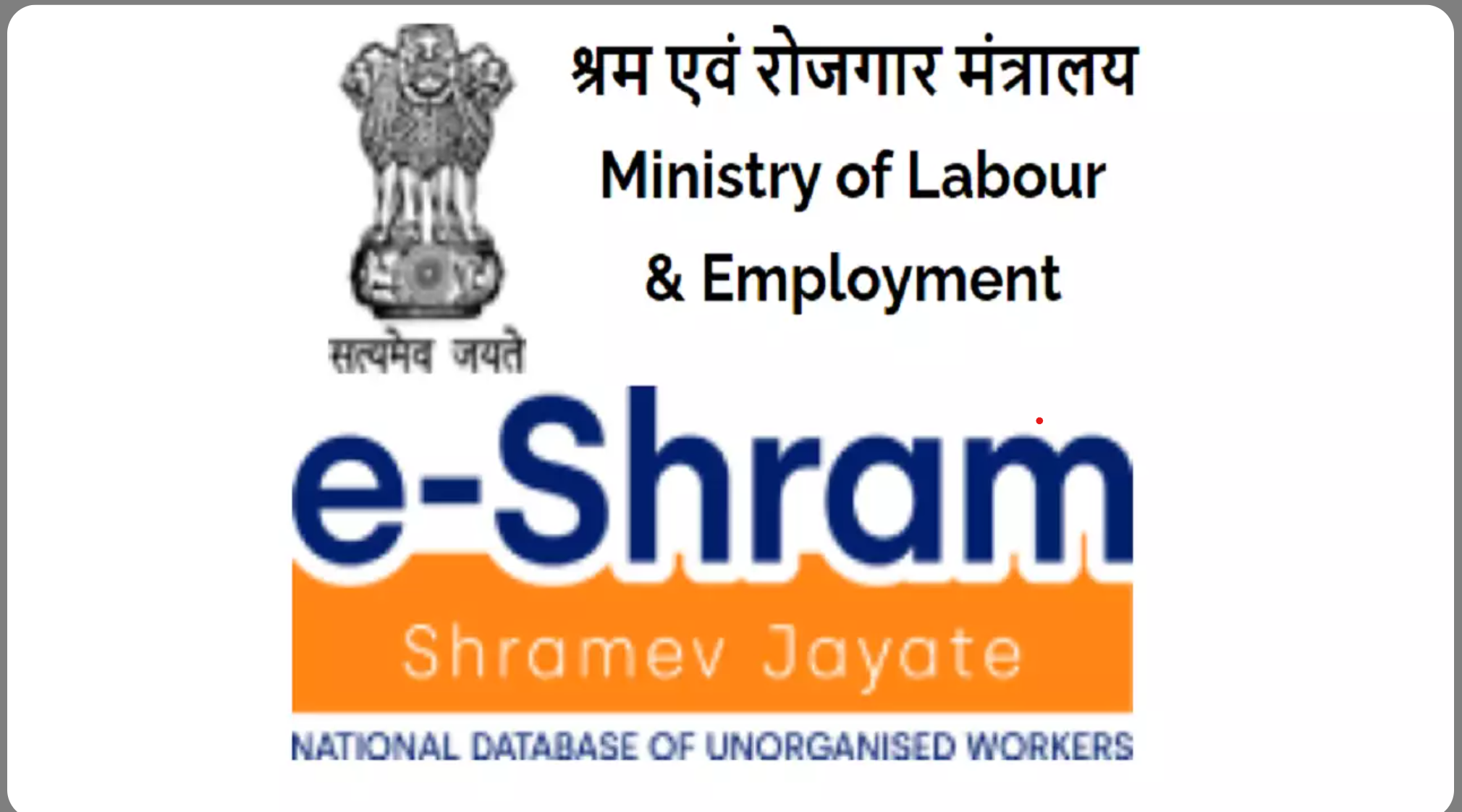
- 04 Sep 2024
In News:
The Ministry of Labour & Employment (MoLE) stated in a latest update that in the short span of three years since its launch, eShram has registered more than 30 crore unorganised workers, showcasing its rapid and widespread adoption among the unorganised workers.
Key Highlights:
- The Government envisages to establishing the eShram portal as a "One-Stop-Solution" for Country’s unorganised workers.
- During Budget speech 2024-25 it has been announced that, A comprehensive integration of eShram portal with other portals will facilitate such One-Stop-Solution.
- This initiative aims to facilitate access of various social security schemes being implemented by different Ministries/ Departments to unorganised workers through the eShram portal.
- As part of the eShram - One Stop Solution project, Ministry of Labour and Employment (MoLE) has been working to integrate major schemes like Pradhan Mantri Jeevan Jyoti Bima Yojana (PMJJBY), Pradhan Mantri Suraksha Bima Yojana (PMSBY), Ayushman Bharat Pradhan Mantri Jan Arogya Yojana (AB-PMJAY), Pradhan Mantri Street Vendors Atmanirbhar Nidhi (PM-SVANidhi), Mahatma Gandhi National Rural Employment Guarantee Act (MGNREGA), Pradhan Mantri Awas Yojana Gramin (PMAY-G), Ration Card scheme etc. for the benefit of the unorganised workers.
What is e-Shram and its purpose?
- e-Shram is a comprehensive National Database of Unorganised Workers (NDUW) launched by the Government of India under the Ministry of Labour & Employment.
- Its primary purpose is to facilitate delivery of welfare benefits and social security measures to unorganised sector workers across the country.
- The platform aims to register and provide identity cards to unorganised workers, enabling them to access various government schemes, benefits, and services more efficiently.
Who are unorganised workers?
Any worker who is a home-based worker, self-employed worker or a wage worker working in the unorganised sector and not a member of ESIC or EPFO, is called an unorganised worker.
What is unorganised sector?
Unorganised sector comprises of establishment/ units which are engaged in the production/ sale of goods/ services and employs less than 10 workers. These units are not covered under ESIC & EPFO.
What is UAN?
UAN or Universal Account Number is a 12 digit number uniquely assigned to each unorganised worker after registration on e-Shram portal. UAN is a permanent number i.e., once assigned, it will remain unchanged for any worker.
India Semiconductor Mission (ISM)
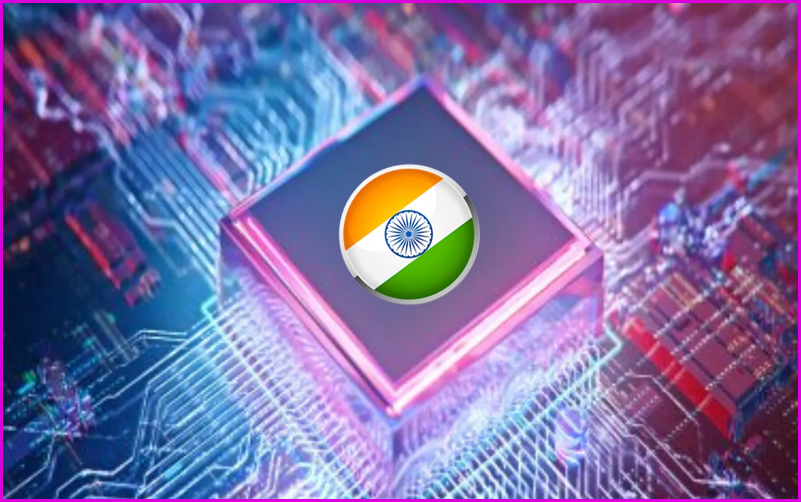
- 04 Sep 2024
In News:
The Union Cabinet, chaired by Prime Minister Narendra Modi, approved the proposal of Kaynes Semicon Pvt Ltd to setup a semiconductor unit in Sanand, Gujarat, with an investment of Rs 3,300 crore.
Key Highlights:
- The proposed unit, under the India Semiconductor Mission (ISM), will produce nearly 60 lakh chips per day.
- The chips produced in this unit will cater to a wide variety of applications which include segments such as industrial, automotive, electric vehicles, consumer electronics, telecom and mobile phones, etc.
- The initiative aligns with India’s goal of developing indigenous semiconductor capabilities.
- As per the reports, India’s semiconductor market is projected to reach $64 billion by 2026, positioning the country as a major global semiconductor hub.
- The first indigenously-developed chip is set to arrive in the country by the end of this year.
- In March, PM Modi laid the foundation stone of three semiconductor projects worth Rs 1.25 lakh crore.
- Tata Electronics is setting up a semiconductor fab in Dholera, Gujarat and one semiconductor unit in Morigaon, Assam.
- CG Power is setting up one semiconductor unit in Sanand. These units will produce lakhs of direct and indirect jobs.
- These four units will bring an investment of almost Rs 1.5 Lakh crore. The cumulative capacity of these units is about 7 crore chips per day, according to the Ministry of Electronics & IT.
- The Programme for Development of Semiconductors and Display Manufacturing Ecosystem in India was notified in 2021 with a total outlay of Rs 76,000 crore.
About India Semiconductor Mission (ISM)
- It is a specialized and independent Business Division within the Digital India Corporation that aims to build a vibrant semiconductor and display ecosystem to enable India’s emergence as a global hub for electronics manufacturing and design.
- ISM has all the administrative and financial powers and is tasked with the responsibility of catalysing the India Semiconductor ecosystem in manufacturing, packaging, and design.
- ISM has an advisory board consisting of some of the leading global experts in the field of semiconductors.
- ISM has been working as a nodal agency for the schemes approved under the Semicon India Programme.
Semicon India Programme:
- Launched in 2021 with a total budget of Rs. 76,000 crore, the ISM is overseen by the Ministry of Electronics and IT (MeitY), Government of India. This initiative is part of a broad effort to develop a sustainable semiconductor and display ecosystem within the country.
- The programme is designed to offer financial support to companies involved in semiconductor and display manufacturing and design. It also aims to foster the creation of domestic Intellectual Property (IP), and to promote and incentivize the Transfer of Technologies (ToT).
- Under this programme, four key schemes have been introduced:
- Scheme for establishing Semiconductor Fabs in India.
- Scheme for establishing Display Fabs in India.
- Scheme for setting up Compound Semiconductors/Silicon Photonics/Sensors Fabs and Semiconductor Assembly, Testing, Marking, and Packaging (ATMP)/OSAT facilities in India.
- Design Linked Incentive (DLI) Scheme.
Delhi Declaration on Civil Aviation
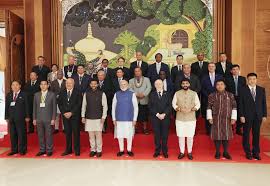
- 13 Sep 2024
In the News:
The Prime Minister has announced the adoption of the Delhi Declaration on Civil Aviation.
Overview:
The Delhi Declaration was unanimously accepted following the conclusion of the 2nd Asia Pacific Ministerial Conference held in New Delhi. This Declaration provides a thorough framework designed to boost regional cooperation, tackle emerging challenges, and promote sustainable growth within the civil aviation sector across the Asia-Pacific region. The conference also marks the 80th anniversary of the International Civil Aviation Organization (ICAO).
Key Announcements:
- Prime Minister Narendra Modi highlighted significant achievements in Indian aviation, noting that women make up 15% of Indian pilots, a figure that surpasses the global average.
- A proposal for establishing an International Buddhist Circuit was introduced to enhance regional tourism and connectivity.
- India plans to build between 350 and 400 new airports by 2047, aiming to increase its global aviation presence.
- A Pacific Small Island Developing States Liaison Office will be created to help smaller nations manage aviation-related issues.
- The ‘Ek Ped Ma Ke Naam’ campaign was launched, with a goal to plant 80,000 trees in honor of ICAO’s 80 years, emphasizing green aviation and sustainability in future initiatives.
Significance of the Delhi Declaration:
- It marks a significant advancement in enhancing regional cooperation in civil aviation within the rapidly growing Asia-Pacific region.
- The framework tackles crucial issues such as sustainability, green aviation, and safety, which are vital for the current aviation industry.
- Initiatives like the International Buddhist Circuit are in line with broader regional objectives to improve connectivity, tourism, and economic development throughout Asia.
- India aims to assert itself as a major global aviation player with its ambitious plan to construct 350-400 airports by 2047, thereby becoming a key contributor to aviation infrastructure development.
Civil Aviation Sector in India:
- India ranks as the third-largest domestic aviation market globally and is projected to become the third-largest overall by 2025.
- The sector is expanding through significant government programs such as the UDAN Scheme, Pradhan Mantri Gati Shakti Plan, and NCAP 2016.
- With 136 operational airports and plans for an additional 100, the government is focused on modernizing infrastructure, improving regional connectivity, and promoting public-private partnerships for airport development.
International Civil Aviation Organization (ICAO):
- Established in 1947 by the Chicago Convention (1944).
- Headquarters: Montreal, Canada.
- Functions:
- Ensures the safety and efficiency of international air transport.
- Sets standards for aviation safety, security, and environmental performance.
- Encourages regional and international agreements to liberalize aviation markets.
- Promotes cooperation and dialogue among its 193 member states.
- Develops legal frameworks for aviation laws and standards.
SAARTHI APP
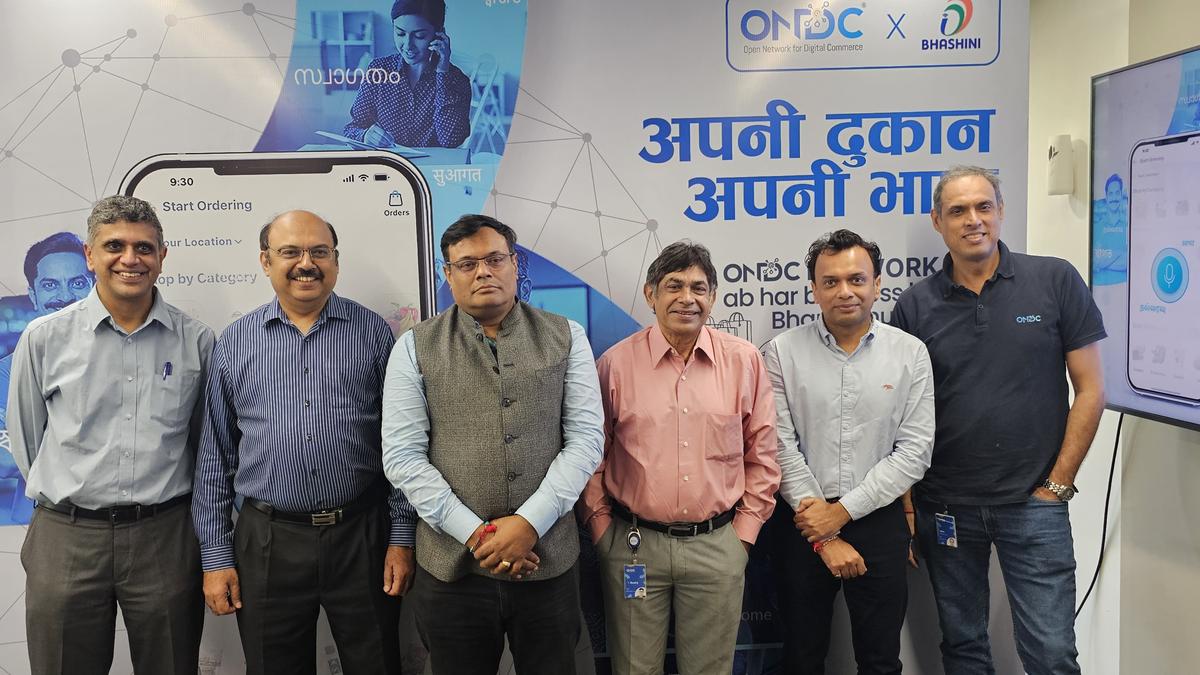
- 13 Sep 2024
In News:
Recently, the Open Network for Digital Commerce (ONDC) introduced the Saarthi app in partnership with Bhashini.
About the Saarthi App:
- The Saarthi app is a reference tool designed to help businesses create their own customized buyer-side applications.
- It facilitates network participants in developing buyer apps with multilingual capabilities. Initially, the app supports Hindi, English, Marathi, Bangla, and Tamil, with plans to expand to all 22 languages offered by Bhashini.
- The app features real-time translation, transliteration, and voice recognition, allowing businesses to broaden their market reach and attract customers from new regions.
What is Bhashini?
- Bhashini is India's AI-driven language translation platform. Its goal is to facilitate easy access to the internet and digital services in Indian languages, including through voice-based interactions, and to aid in the creation of content in these languages.
- The platform is designed to provide Artificial Intelligence and Natural Language Processing (NLP) resources to Indian MSMEs, startups, and individual innovators. This support will help developers offer all Indians access to the internet and digital services in their native languages.
- Additionally, Bhashini features a ‘Bhasadaan’ section for crowdsourcing contributions and is available through Android and iOS apps.
Exercise AL NAJAH
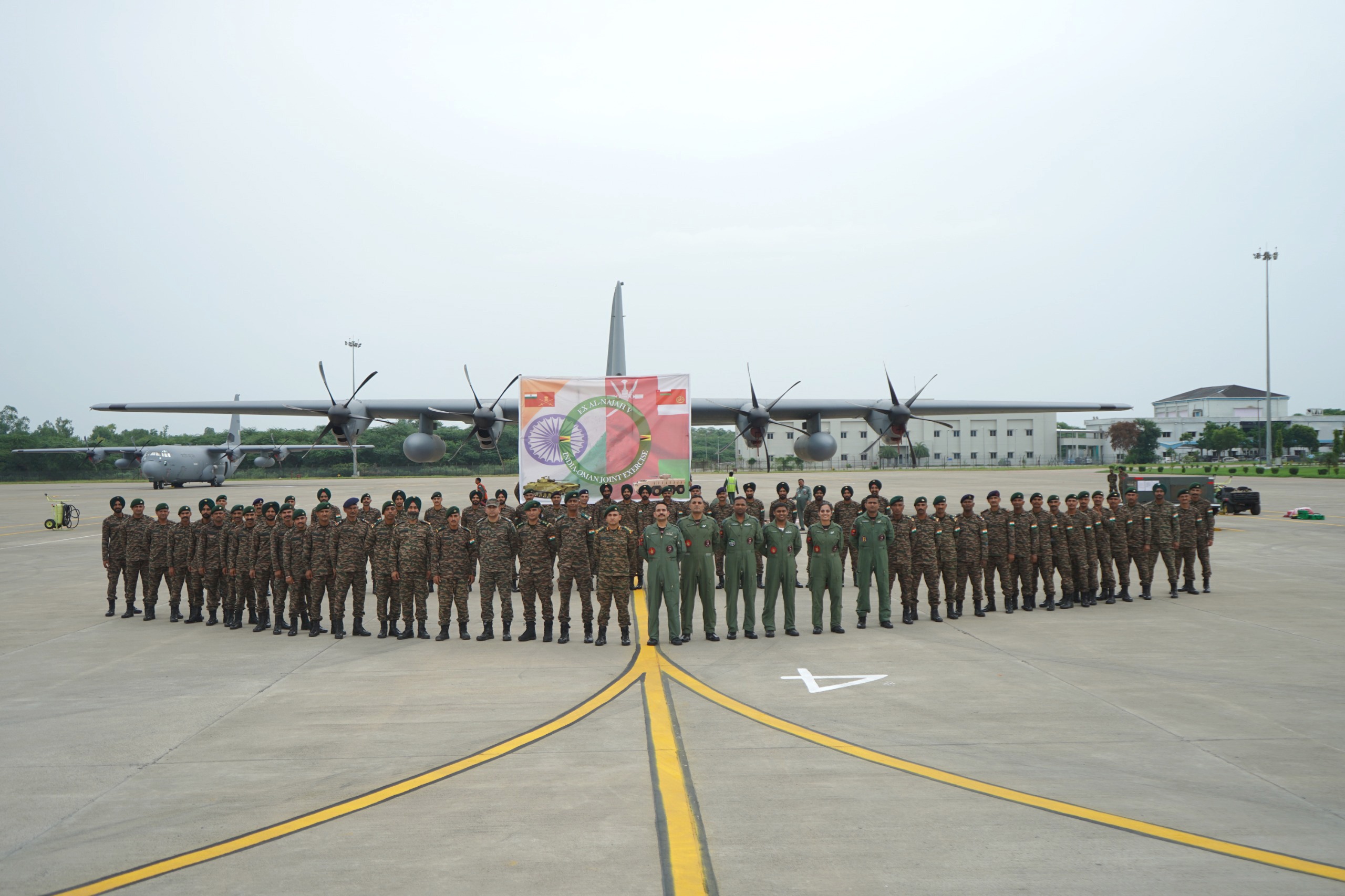
- 13 Sep 2024
In News:
- Indian Army contingent departed for the 5th edition of the India-Oman Joint Military Exercise AL NAJAH on September 12, 2024.
Key Details:
- Location: Rabkoot Training Area, Salalah, Oman.
- Frequency: Exercise AL NAJAH has been held biennially since 2015, alternating between India and Oman. Last edition was conducted at Mahajan, Rajasthan.
- Indian Army Contingent:
- Size: 60 personnel
- Composition: Battalion of the Mechanised Infantry Regiment, along with personnel from other arms and services.
- Royal Army of Oman Contingent:
- Size: 60 personnel
- Composition: Troops of the Frontier Force.
- Objective:
- Enhance joint military capability for counter-terrorism operations under Chapter VII of the United Nations Charter.
- Focus on operations in a desert environment.
- Tactical Drills:
- Joint Planning
- Cordon and Search Operation
- Fighting in Built-Up Areas
- Establishment of Mobile Vehicle Check Posts
- Counter Drone Operations
- Room Intervention
- Training Exercises:
- Combined field training exercises simulating real-world counter-terrorism missions.
- Outcomes Expected:
- Exchange of best practices in tactics, techniques, and procedures for joint operations.
- Foster interoperability, goodwill, and camaraderie between the two armies.
- Strengthen defense cooperation and enhance bilateral relations between India and Oman.
Battle of Saragarhi
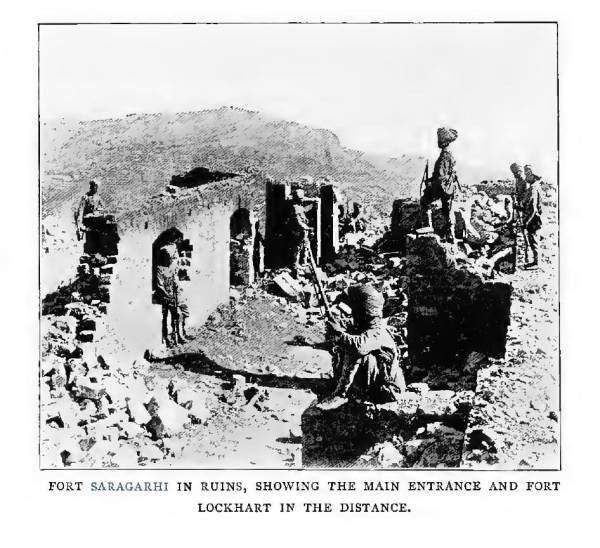
- 13 Sep 2024
Why September 12 is Observed as Saragarhi Day:
- Historical Significance: The Battle of Saragarhi is considered one of the finest last stands in military history. On September 12, 1897, 21 soldiers of the 36th Sikh Regiment (now 4 Sikh) defended the fort against 8,000 Orakzai and Afridi tribal militants.
- 127th Anniversary: September 12 marks the 127th anniversary of this battle, which is now regarded as a legendary stand in global military history.
- The Battle: The 21 soldiers held the fort for seven hours despite being heavily outnumbered. They killed 200 militants and injured 600 before they were overwhelmed.
- Capt Amarinder Singh’s Account: In his book, he notes that the soldiers were aware of their certain death but chose to fight valiantly without surrendering, demonstrating unparalleled bravery.
What was Saragarhi and its Importance:
- Location and Role: Saragarhi was a communication tower between Fort Lockhart and Fort Gulistan in the North West Frontier Province (now Pakistan). It was crucial for linking these two forts, which housed a large number of British troops.
- Manning of Saragarhi: On that day, it was manned by only 21 soldiers from the 36th Sikh Regiment and a non-combatant, Daad, who performed odd jobs for the troops.
Details of the Battle:
- Initial Encounter: Around 9 am, the sentry spotted a large tribal army approaching, estimated between 8,000 and 15,000 strong.
- Communication: Sepoy Gurmukh Singh sent a Morse code message to Lt Col Houghton, requesting reinforcements. The response was to hold the position, as the supply route had been cut off.
- Challenges: The soldiers faced being outnumbered, limited ammunition (about 400 rounds per man), and communication issues. Sepoy Gurmukh Singh managed all heliograph communication tasks alone.
Key Figures:
- Havildar Ishar Singh: Leader of the defending troops, known for his bravery and independent nature. He was a respected and loved figure in his regiment.
- Sepoy Gurmukh Singh: The signalman who maintained communication during the battle, despite overwhelming challenges.
- Daad: The non-combatant who fought alongside the soldiers and killed five militants before being killed himself.
Recognition and Legacy:
- British Recognition: Queen Victoria awarded the 21 deceased soldiers the Indian Order of Merit (equivalent to the Victoria Cross), along with two ‘marabas’ (50 acres) and Rs 500 each.
- Current Observance: In 2017, the Punjab government declared September 12 as Saragarhi Day.
- Memorials: The Khyber Scouts regiment of the Pakistani army still mounts a guard at the Saragarhi memorial. The British built an obelisk with bricks from Saragarhi and commissioned gurdwaras at Amritsar and Ferozepur in honor of the martyrs. Shiromani Gurudwara Parbandhak Committee has named a hall after Saragarhi.
- Cultural Impact: The Battle of Saragarhi has inspired various media portrayals, including Akshay Kumar’s film Kesari.
INDUS-X Summit 2024

- 14 Sep 2024
The third edition of the INDUS-X Summit, held on September 9-10, 2024, in California, marked a significant advancement in the collaborative defence innovation ecosystem between India and the USA. Co-organized by the U.S.-India Strategic Partnership Forum (USISPF) and Stanford University, the summit emphasized the deepening of defence cooperation through innovation, joint research, and investment.
Key Outcomes
A major highlight of the summit was the signing of a Memorandum of Understanding (MoU) between India’s Innovations for Defence Excellence (iDEX) and the US Department of Defense’s Defence Innovation Unit (DIU). This agreement aims to enhance collaboration in defence innovation. The summit also saw the release of the INDUS-X Impact Report and the launch of a dedicated webpage for the initiative on both iDEX and DIU platforms.
Technological Showcase and Expert Dialogue
The summit provided a platform for startups and MSMEs to present cutting-edge technologies. Additionally, two advisory forums—the Senior Advisory Group and the Senior Leaders Forum—facilitated in-depth discussions on future technology trends, defence supply chain resilience, and funding opportunities for defence innovation. The discussions included contributions from experts across the defence industry, investment sectors, academia, and think tanks from both countries.
Leadership and Commitment
The Indian delegation was led by Amit Satija, Joint Secretary (Defence Industries Promotion), who underscored the commitment of both India and the USA to advancing defence technology through strategic collaboration. Since its launch in June 2023 during the Indian Prime Minister’s visit to the US, INDUS-X has achieved significant milestones, reinforcing its role in strengthening the US-India defence innovation partnership.
NEUROMORPHIC COMPUTING
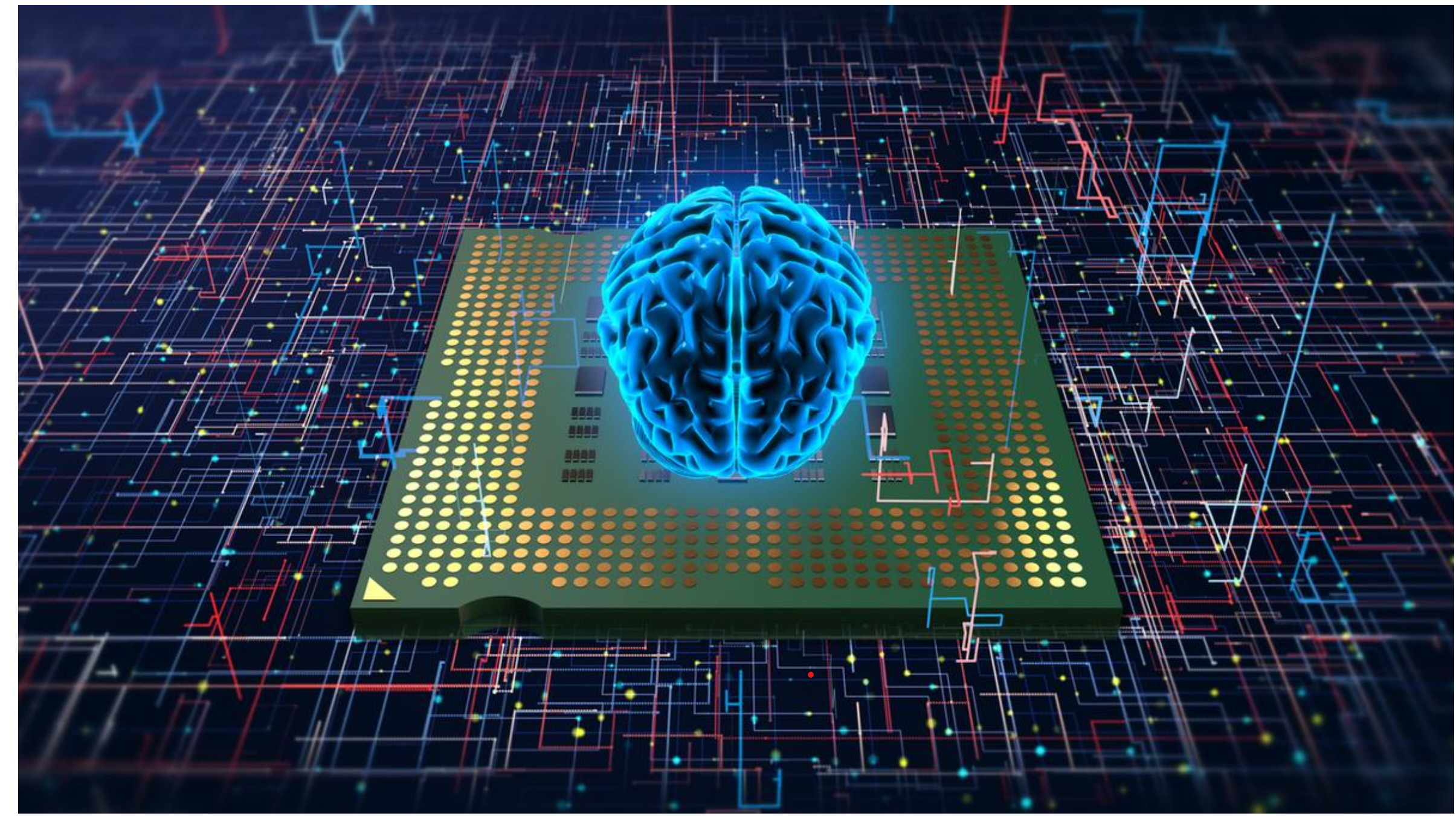
- 14 Sep 2024
Indian Researchers Advance Neuromorphic Computing with Innovative Molecular Film
Researchers at the Indian Institute of Science (IISc) have made a groundbreaking development in neuromorphic computing, creating an analog computing system that leverages molecular films. This new system can store and process data across 16,500 different states, a significant leap from conventional binary computing methods.
Understanding Neuromorphic Computing
Neuromorphic computing is an advanced computing paradigm designed to emulate the structure and function of the human brain. By using artificial neurons and synapses, this approach marks a departure from traditional binary computing, enabling systems to learn and adapt from their environments.
How Neuromorphic Computing Works
Neuromorphic computing relies on Artificial Neural Networks (ANNs), which consist of millions of artificial neurons similar to those found in the human brain. These neurons communicate through electrical spikes or signals, following the principles of Spiking Neural Networks (SNNs). This setup allows the system to replicate the brain’s neuro-biological networks, performing tasks such as visual recognition and data interpretation with high efficiency.
Key Features of Neuromorphic Systems
- Brain-Inspired Architecture: Neuromorphic systems mimic the brain's structure, particularly the neocortex, which is involved in higher cognitive functions like sensory perception and motor commands.
- Spiking Neural Networks: These networks use spiking neurons that interact through electrical signals, mirroring the behavior of biological neurons. This design facilitates parallel processing and real-time learning.
- Integrated Memory and Processing: Unlike traditional von Neumann architecture, which separates memory and processing functions, neuromorphic systems combine these functions, leading to improved computational efficiency.
Advantages of Neuromorphic Computing
- Enhanced Efficiency: Neuromorphic computing enables faster problem-solving, pattern recognition, and decision-making compared to conventional systems.
- Revolutionizing AI Hardware: It holds the potential to transform AI hardware, allowing for complex tasks, such as training Large Language Models (LLMs), to be performed on personal devices. This advancement addresses current limitations related to hardware resources and energy efficiency.
- Energy Efficiency: Current AI tools are confined to data centers due to their high energy demands. Neuromorphic computing could overcome these constraints by providing energy-efficient hardware solutions.
Integration with Molecular Films
Molecular films, ultrathin layers engineered with specific electrical and optical properties, are central to this new advancement. These films act as neuromorphic accelerators, enhancing data storage and processing capabilities. They simulate brain-like parallel processing, improving performance in tasks such as matrix multiplication.
The recent development involves a molecular film that supports 16,500 possible states, a significant advancement over traditional binary systems. This film uses molecular and ionic movements to represent memory states, mapped through precise electrical pulses, creating what can be described as a "molecular diary" of states.
Comparison with Traditional Computing
- Parallel Processing: Neuromorphic computers can handle multiple streams of information simultaneously, unlike traditional computers that process data sequentially.
- Energy Efficiency: These systems consume less power by computing only when relevant events occur, making them suitable for real-time data processing applications.
- Analog vs. Binary: Traditional binary computing operates with bits that are either 0 or 1, akin to a light switch being on or off. In contrast, analog computing involves continuous values, similar to a dimmer switch with varying brightness levels.
This breakthrough by IISc researchers signifies a major step forward in neuromorphic computing, potentially transforming the way we approach data processing and artificial intelligence.
4 Years of Pradhan Mantri Matsya Sampada Yojana (PMMSY)
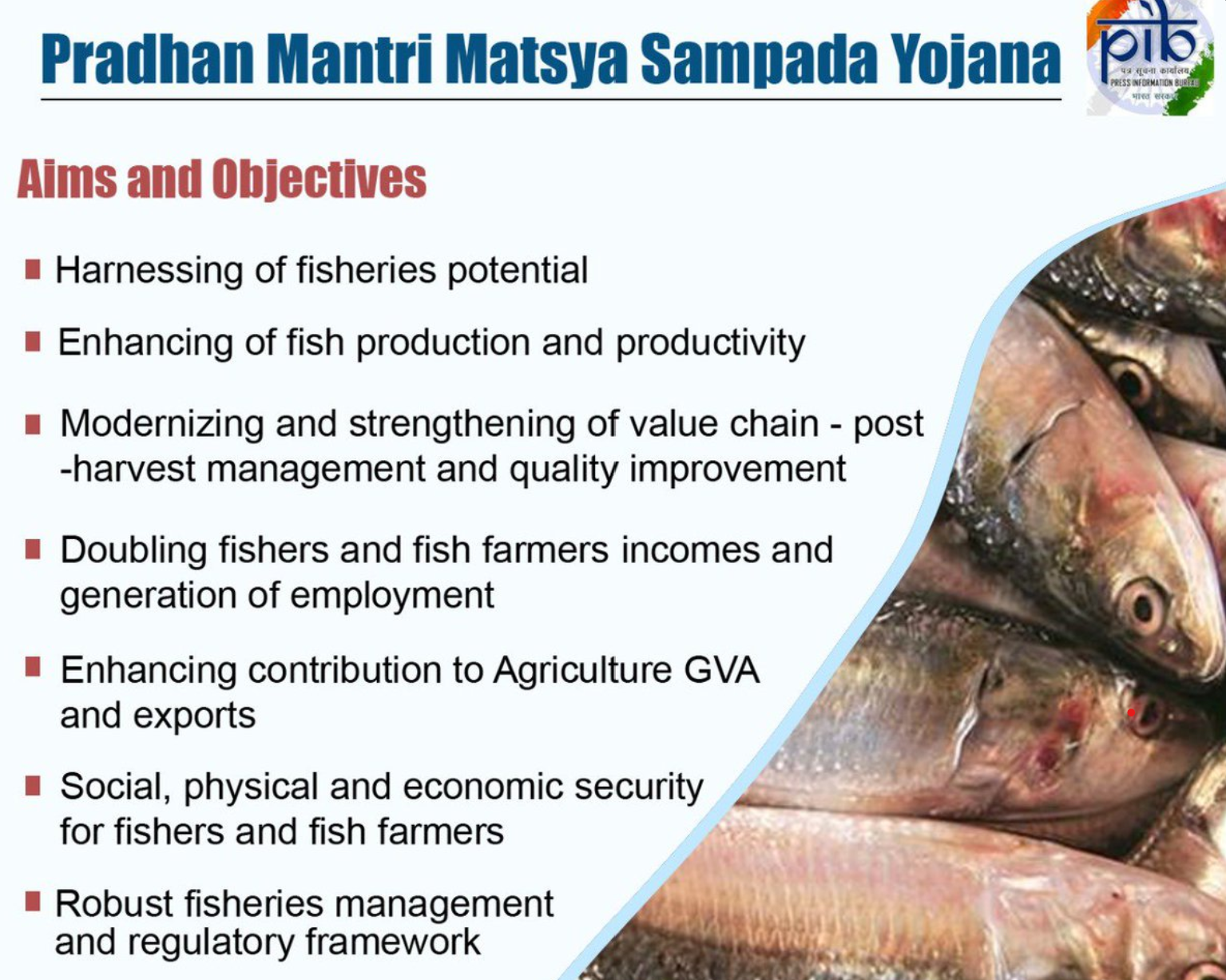
- 14 Sep 2024
Context:
Celebrating Four Years of Pradhan Mantri Matsya Sampada Yojana (PMMSY)
The Pradhan Mantri Matsya Sampada Yojana (PMMSY) has marked its fourth anniversary since its launch in 2020. This flagship scheme, managed by the Department of Fisheries under the Ministry of Fisheries, Animal Husbandry, and Dairying, aims to transform India’s fisheries sector into a vibrant and sustainable industry.
About PMMSY
The PMMSY is designed to invigorate the fisheries sector through a comprehensive approach that consolidates various existing schemes and initiatives. It operates as an umbrella scheme with two main components:
- Central Sector Scheme (CS)
- Centrally Sponsored Scheme (CSS)
The CSS component is divided into:
Non-Beneficiary Oriented Subcomponents:
- Enhancement of Production and Productivity
- Infrastructure and Post-Harvest Management
- Fisheries Management and Regulatory Framework
Fisheries Sector Overview
India stands as the third-largest fish producer globally and the second-largest in aquaculture production. It is also the fourth-largest exporter of fish and fisheries products, experiencing a notable 26.73% growth in exports from FY 2021-22 to FY 2022-23. Andhra Pradesh leads the country in fish production, followed by West Bengal and Gujarat. The sector supports the livelihoods of over 30 million people.
The Department of Fisheries is spearheading the PMMSY to foster a "Blue Revolution" through sustainable and responsible development of the fisheries sector.
Challenges Facing the Fisheries Sector
1. Overfishing: Excessive fishing pressure threatens fish stocks and disrupts ecosystem balance.
2. Illegal, Unreported, and Unregulated (IUU) Fishing: Practices such as fishing without proper authorization and using banned gear undermine conservation efforts.
3. Lack of Infrastructure and Technology: Outdated technology and inadequate storage and transportation facilities result in post-harvest losses and reduced productivity.
4. Poor Fisheries Management: Inefficient regulation enforcement and lack of comprehensive data exacerbate overfishing and IUU fishing.
5. Pollution and Habitat Destruction: Industrial pollution and habitat destruction from activities like coastal reclamation impact marine and freshwater ecosystems.
6. Climate Change: Altered oceanic and freshwater environments affect fish distribution and reproductive cycles, disrupting fisheries ecosystems.
7. Socio-Economic Issues: Poverty and limited livelihood options increase the vulnerability of fishing communities.
Government Initiatives for Sector Growth
1. National Fisheries Development Board (NFDB): Established in 2006, the NFDB plans and promotes fisheries development, enhancing production and infrastructure.
2. Blue Revolution: Launched in 2015, this initiative focuses on sustainable development, modern technology adoption, and strengthening fisheries governance.
3. Sagarmala Programme: Also launched in 2015, it aims to boost port-led development and includes projects to develop fishing harbors and cold chain infrastructure.
4. National Fisheries Policy: Introduced in 2020, this policy provides a framework for sustainable fisheries development, focusing on responsible management and socio-economic improvements.
5. Fish Farmers Development Agencies (FFDAs): Established at the district level to provide technical guidance and support to fish farmers.
6. Fisheries and Aquaculture Infrastructure Development Fund (FIDF): Created in 2018-19 with a fund of Rs 7,522.48 crore to address infrastructure needs, resulting in 121 approved projects.
7. Coastal Aquaculture Authority (CAA): Regulates coastal aquaculture to ensure sustainability and environmental conservation.
Way Forward
The fisheries sector in India holds immense potential due to its extensive coastline and water resources. Key measures to further enhance the sector include:
- Strengthening Monitoring and Enforcement: Combat IUU fishing with better monitoring and regulatory mechanisms.
- Supporting Sustainable Practices: Provide financial incentives for adopting modern technologies and sustainable practices.
- Protecting Aquatic Habitats: Ensure the conservation and restoration of vital habitats like mangroves and coral reefs.
- Improving Supply Chain Infrastructure: Develop better market linkages to ensure fair pricing and access to markets.
With these strategies, the PMMSY aims to drive the sustainable growth of India’s fisheries sector and bolster its contribution to the economy and livelihoods.
What is Helium & why is it used in rockets?

- 14 Sep 2024
The Crucial Role of Helium in Space Missions and the Challenges It Presents
Two NASA astronauts aboard Boeing’s Starliner will extend their stay on the International Space Station (ISS) due to issues with the spacecraft’s propulsion system, which includes problematic helium leaks. Meanwhile, SpaceX’s Polaris Dawn mission, which successfully launched on Tuesday, experienced delays due to similar helium-related issues with ground equipment.
The Importance of Helium in Spacecraft
Helium plays a critical role in space missions for several reasons. As an inert gas, it does not react with other substances or combust, which is crucial for maintaining the safety and stability of rocket systems. With an atomic number of 2, helium is the second lightest element after hydrogen. Its lightweight nature is essential for reducing the overall mass of rockets, which in turn minimizes fuel consumption and the need for more powerful (and costly) engines.
A key property of helium is its extremely low boiling point of –268.9 degrees Celsius. This allows it to remain in a gaseous state even in the super-cold environments where many rocket fuels are stored.
How Helium Is Utilized in Spacecraft
In spacecraft, helium is primarily used for:
- Pressurizing Fuel Tanks: Helium ensures that fuel flows smoothly to the rocket’s engines. As fuel and oxidizer are consumed during launch, helium fills the empty space in the tanks, maintaining consistent pressure.
- Cooling Systems: Helium is also used in cooling systems to manage the temperature of various components, preventing overheating and ensuring the proper functioning of the spacecraft.
Due to its non-reactive nature, helium can safely interact with the residual contents of the tanks without causing adverse reactions.
The Challenge of Helium Leaks
Despite its advantages, helium is prone to leakage. Its small atomic size and low molecular weight allow helium atoms to escape through even minor gaps or seals in storage tanks and fuel systems. This characteristic poses a significant challenge for space missions.
On Earth, helium leaks are easier to detect due to the gas’s rarity in the atmosphere. This makes helium a valuable tool for identifying potential faults in rocket or spacecraft fuel systems. The frequency of these leaks across various space missions, including those by ISRO and ESA, underscores a broader industry need for improved valve designs and more precise tightening mechanisms.
OpenAI’s powerful new AI model o1
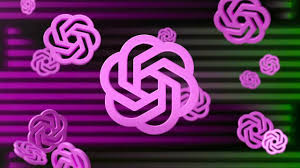
- 14 Sep 2024
OpenAI Unveils New AI Model: Key Features and Implications
OpenAI has introduced its latest AI model, a significant advancement that aims to elevate the capabilities of artificial intelligence. This new model, part of the enigmatic ‘Project Strawberry,’ is designed to think more like a human when solving complex problems, offering a glimpse into the future of AI reasoning.
Introduction of OpenAI o1
The new OpenAI o1 model marks the beginning of a series of "reasoning" models intended to address intricate tasks in fields such as science, coding, and mathematics. This model, released as part of a preview in both ChatGPT and the API, represents a major leap forward in AI technology. OpenAI has announced that this is just the start, with regular updates and enhancements expected. Additionally, evaluations for the next model update, currently under development, are included in this release.
How It Works
The o1 model is designed to approach queries with a level of careful consideration similar to human problem-solving processes. It learns to tackle problems from various angles, verify its outputs, and improve through feedback. According to OpenAI, this model performs at a level comparable to PhD students in disciplines such as physics, chemistry, and biology. It is particularly adept in mathematics and coding, solving 83% of problems in a challenging math contest— a notable improvement from previous versions that only managed 13%. In coding, it has outperformed 89% of participants.
Sub-Models and Their Features
Alongside the main o1 model, OpenAI has also launched the o1-Mini. This version is a more cost-effective alternative, being 80% cheaper than the o1-preview. The o1-Mini is designed to offer fast and efficient reasoning, particularly beneficial for developers focused on coding tasks.
Implications for Jobs and Research
The advanced problem-solving capabilities of the o1 model are expected to impact various job sectors, particularly those involving routine coding, data analysis, and mathematical modeling. While this could reduce the need for human intervention in some tasks, it may also create new roles in AI safety and maintenance. For researchers, the model offers a powerful tool for accelerating breakthroughs in fields like physics, chemistry, biology, and healthcare. Its ability to generate formulas and analyze large datasets positions it as a valuable asset for advancing scientific research.
Access and Usage
The OpenAI o1 model is now accessible to ChatGPT Plus and Team users. The o1-preview and o1-mini can be selected using the model picker, with weekly message limits set at 30 for o1-preview and 50 for o1-mini. This rollout marks a new era in AI capabilities, showcasing OpenAI’s commitment to pushing the boundaries of artificial intelligence.
Key Points to Note
1. Not Artificial General Intelligence (AGI): Despite its advanced capabilities, o1-preview is not a step towards AGI, which aims for AI systems to perform cognitive tasks as well as or better than humans. The o1 models, while more adept at reasoning, still fall short of human-level intelligence.
2. Impact on Competition: While o1 gives OpenAI a temporary edge, it is expected to prompt competitors like Google, Meta, and others to accelerate their development of similar advanced models. These companies have the expertise to quickly develop models that could rival or surpass o1's capabilities.
3. Unknowns About Model Operations: Details on how o1 operates remain limited. It combines various AI techniques, including "chain of thought" reasoning and reinforcement learning, but specifics about its training data and internal mechanisms are not fully disclosed.
4. Cost Considerations: Using o1-preview comes at a higher cost compared to previous models. OpenAI charges $15 per million input tokens and $60 per million output tokens for corporate customers, compared to $5 and $15, respectively, for GPT-4o. The model’s complex reasoning requires more tokens, potentially making it more expensive to use.
5. Chain of Thought Transparency: OpenAI has chosen not to reveal the chain of thought process used by o1, citing safety and competitive reasons. This decision may cause issues for enterprise customers who lack visibility into their usage and billing accuracy.
6. New Scaling Laws: OpenAI's o1 models reveal new "scaling laws" suggesting that longer inference times can improve accuracy. This could increase the computing power and costs required to run these models effectively.
7. Potential Risks: o1 models could enable powerful AI agents, but they also present risks. Instances of “reward hacking” and unintended actions suggest that companies must carefully manage these agents to avoid ethical, legal, or financial issues.
8. Safety Assessments: OpenAI reports that o1 is generally safer than previous models, though it still poses a "medium risk" of assisting in biological attacks. This rating has raised concerns among AI safety and national security experts.
9. Concerns About Persuasion and Deceptive Alignment: AI safety experts are wary of o1’s persuasive capabilities and the potential for “deceptive alignment,” where a model might deceive users to achieve hidden goals. These concerns highlight the ongoing challenges in ensuring AI safety and transparency.
Overall, while the o1 models represent a significant leap forward in AI reasoning and problem-solving, they also introduce new complexities and risks that will need to be managed as they become more integrated into various applications.
Commission for Scientific and Technical Terminology (CSTT)
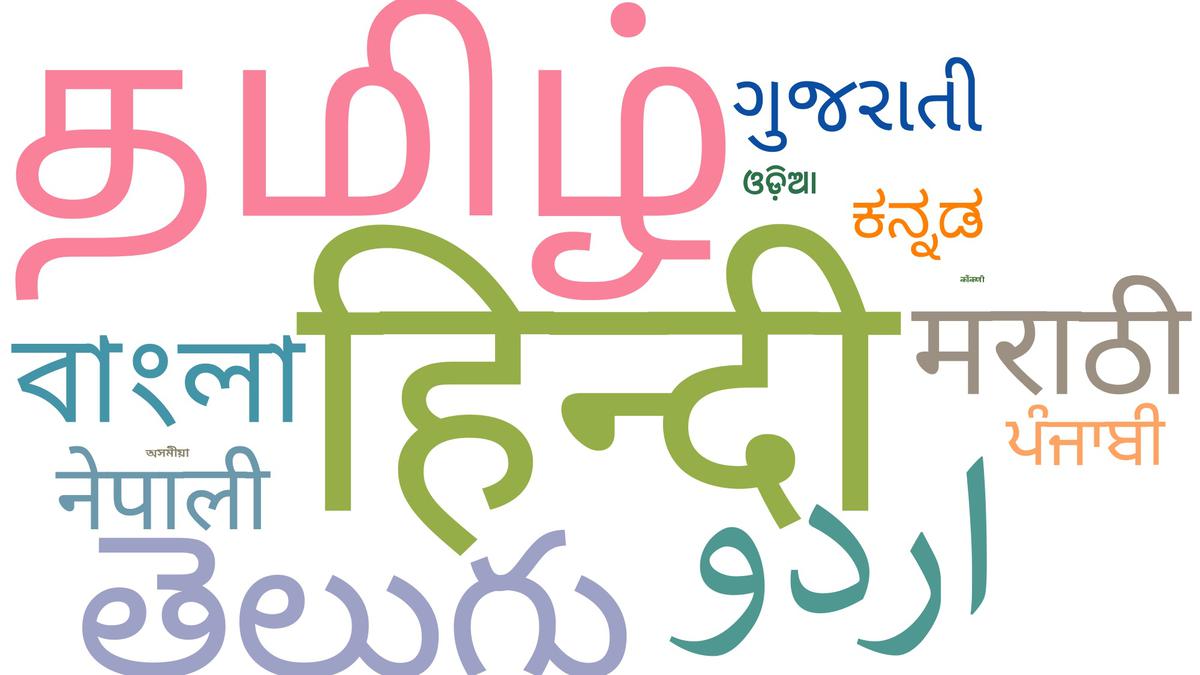
- 12 Sep 2024
In News:
The Commission for Scientific and Technical Terminology (CSTT) has recently unveiled a groundbreaking web portal, ‘shabd.education.gov.in,’ which is set to be a significant resource for technical terminology across all 22 official Indian languages. This initiative, supported by the Union Education Ministry, aims to consolidate and digitize scientific and technical terminologies, making them accessible to users in multiple languages.
Key Features of the Portal:
- Central Repository: The website serves as a central repository for glossaries developed by CSTT and other institutions. It currently hosts 322 glossaries with approximately 2.2 million words, with a goal to expand to 450 glossaries.
- Search Functionality: Users can search for technical terms using various criteria, including language, subject, type of dictionary, or specific language pairs. This comprehensive search capability allows for targeted and efficient access to information.
- Feedback Mechanism: The portal enables users to provide feedback on the terminologies, helping to refine and update the database based on real-world use and expert input.
- Expanding Technical Education: The launch of this platform supports the broader goal of enhancing technical education in Indian languages, which is crucial for fields like medicine and engineering.
Historical Context and Support:
- CSTT's Role: Established in 1961, CSTT is tasked with developing and defining scientific and technical terms in Hindi and other Indian languages. The commission also publishes textbooks, monographs, and journals, and organizes various academic events to promote standardized terminology.
- Process of Compilation: Terminologies are compiled through specialized committees for each subject area, with separate language committees ensuring the standardization of terms. The CSTT has been assisted by the National Translation Mission in this effort.
Impact and Usage:
- Since its launch in March 2024, the portal has seen significant engagement, with over 122,000 hits from both domestic and international users. This reflects the growing interest and need for accessible technical terminology in multiple languages.
- The portal is poised to play a crucial role in standardizing and disseminating technical knowledge across diverse linguistic communities in India, facilitating better understanding and education in various scientific and technical fields.
Ayushman Bharat Pradhan Mantri Jan Arogya Yojana (AB PM-JAY)
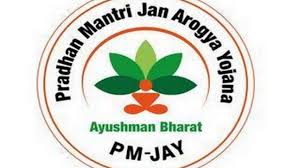
- 12 Sep 2024
In News:
- The Union Cabinet has approved a major expansion of the Ayushman Bharat Pradhan Mantri Jan Arogya Yojana (AB PM-JAY) to cover all senior citizens aged 70 years and above.
- This change allows anyone in this age group to be eligible for health insurance, regardless of their income level.
- This expansion aims to address the healthcare needs of the elderly, who often face higher medical expenses as they age.
- By lifting income restrictions, the government is ensuring that more senior citizens can benefit from much-needed health coverage, which will help ease the financial burden of healthcare.
How does the scheme work?
- The AB PM-JAY now covers an additional 6 crore individuals from 4.5 crore families, focusing on seniors aged 70 and above. Each senior citizen will be given a health card, allowing them easy access to healthcare services under the scheme.
- The scheme provides Rs 5 lakh coverage annually per family. If there are multiple senior citizens in the same family, this coverage is shared among them. The scheme is particularly beneficial for nuclear families, where the financial burden on elderly members can be more difficult to manage.
Key details of the scheme for senior citizens above 70
- Eligibility - All senior citizens aged 70 and above are eligible for Rs 5 lakh health coverage, regardless of income or social status.
- Top-up coverage - For families already enrolled in Ayushman Bharat, senior members will receive an extra Rs 5 lakh top-up, which is solely for their use.
- Private insurance - Senior citizens with private health insurance can still take advantage of the scheme without any conflict with their existing coverage.
- Public health schemes - Seniors who are part of other public health schemes like the Central Government Health Scheme (CGHS), Ex-Servicemen Contributory Health Scheme (ECHS), or Ayushman Central Armed Police Force (CAPF) will need to choose between their current insurance and the new Ayushman Bharat health coverage.
- New health cards - All eligible senior citizens will receive a separate health card, which will help them access the scheme’s benefits more efficiently.
Who pays for the coverage?
- The cost of this expanded coverage will be Rs 3,437 crore initially. State governments will bear 40% of the expenses, while the Centre will cover the remaining 60%. For states in hilly and northeastern regions, the Centre will fund 90% of the costs.
- As more senior citizens enrol, the costs may increase. Experts point out that covering elderly individuals often costs more than providing insurance for younger, economically weaker sections of society. However, the government is prepared to scale up the coverage based on demand.
Ayushman Bharat Pradhan Mantri Jan Arogya Yojana (AB PM-JAY)
- AB PM-JAY launched in 2018, is a flagship program designed to offer affordable and accessible healthcare to millions of vulnerable families across India.
- The primary aim is to provide health insurance coverage up to ?5 lakhs per family annually for secondary and tertiary care hospitalization.
- The scheme currently supports 55 crore individuals from 12.34 crore families throughout the country.
PM E-Drive replaces FAME India Phase II

- 12 Sep 2024
In News:
The Union Cabinet recently approved a new scheme called PM Electric Drive Revolution in Innovative Vehicle Enhancement (PM E-DRIVE) for the promotion of electric vehicles (EV) in India, replacing an earlier flagship scheme.
Key Highlights:
- The Ministry of Heavy Industries (MHI) will implement the new scheme with a total outlay of Rs 10,900 crore over a period of two years.
- The PM E-DRIVE will replace Faster Adoption and Manufacturing of Electric Vehicles in India Phase II (FAME India Phase II).
- The new scheme offers subsidies/demand incentives worth Rs 3,679 crore to incentivise adoption of electric two-wheelers, electric three-wheelers, e-ambulances, e-trucks and other emerging EVs.
- The scheme will support 24.79 lakh electric two-wheelers, 3.16 lakh e-three wheelers, and 14,028 e-buses.
- For e-ambulances, a total of Rs 500 crore has been allocated. In addition, Rs 4,391 crore has been provided for the procurement of 14,028 e-buses by state transport units and public transport agencies.
- To implement this, demand aggregation will be done by Convenience Energy Services Limited (CESL) in nine cities with a population of more than 40 lakh — Delhi, Mumbai, Kolkata, Chennai, Ahmedabad, Surat, Bengaluru, Pune, and Hyderabad. Intercity and interstate e-buses will also be supported in consultation with states.
- For availing benefits under the scheme, the ministry will introduce e-vouchers for EV buyers. At the time of purchase, the scheme portal will generate an Aadhaar authenticated e-voucher, which needs to be signed by the buyer and submitted to the dealer.
- Subsequently, the e-voucher will also be signed by the dealer and uploaded on the PM E-DRIVE portal. The signed e-voucher will be sent to the buyer and dealer via SMS, and will be essential for the OEM (original equipment manufacturer) to claim reimbursement of demand incentives under the scheme.
- The primary objective of the PM E-DRIVE scheme is to expedite the adoption of EVs by providing upfront incentives for their purchase, as well as by facilitating the establishment of essential charging infrastructure for EVs.
FAME India Phase II
Launched on April 1, 2019, with a budget of ?10,000 crores for three years. It is an extension of FAME India I, which began on April 1, 2015, with a ?895 crore budget.
Objectives:
- Promote the adoption of electric and hybrid vehicles.
- Provide upfront incentives for purchasing electric vehicles.
- Develop necessary charging infrastructure.
- Address environmental pollution and fuel security.
Focus Areas:
- Public transportation and shared transport.
- Incentives for electric buses through State/City Transport Corporations.
- For 3W and 4W vehicles, incentives are for public transport and commercial vehicles.
- For e-2Ws, focus is on private vehicles.
Targets:
- 10 lakh e-2Ws
- 5 lakh e-3Ws
- 55,000 e-4Ws
- 7,000 electric buses
Incentives:
- Applied to vehicles with advanced batteries, such as Lithium-ion and other new technologies.
Charging Infrastructure:
- 2,700 charging stations in metros, million-plus cities, smart cities, and hilly areas.
- Charging stations on major highways at 25 km intervals, on both sides of the road.
40% Amazon rainforest unprotected: why is this significant for climate change?
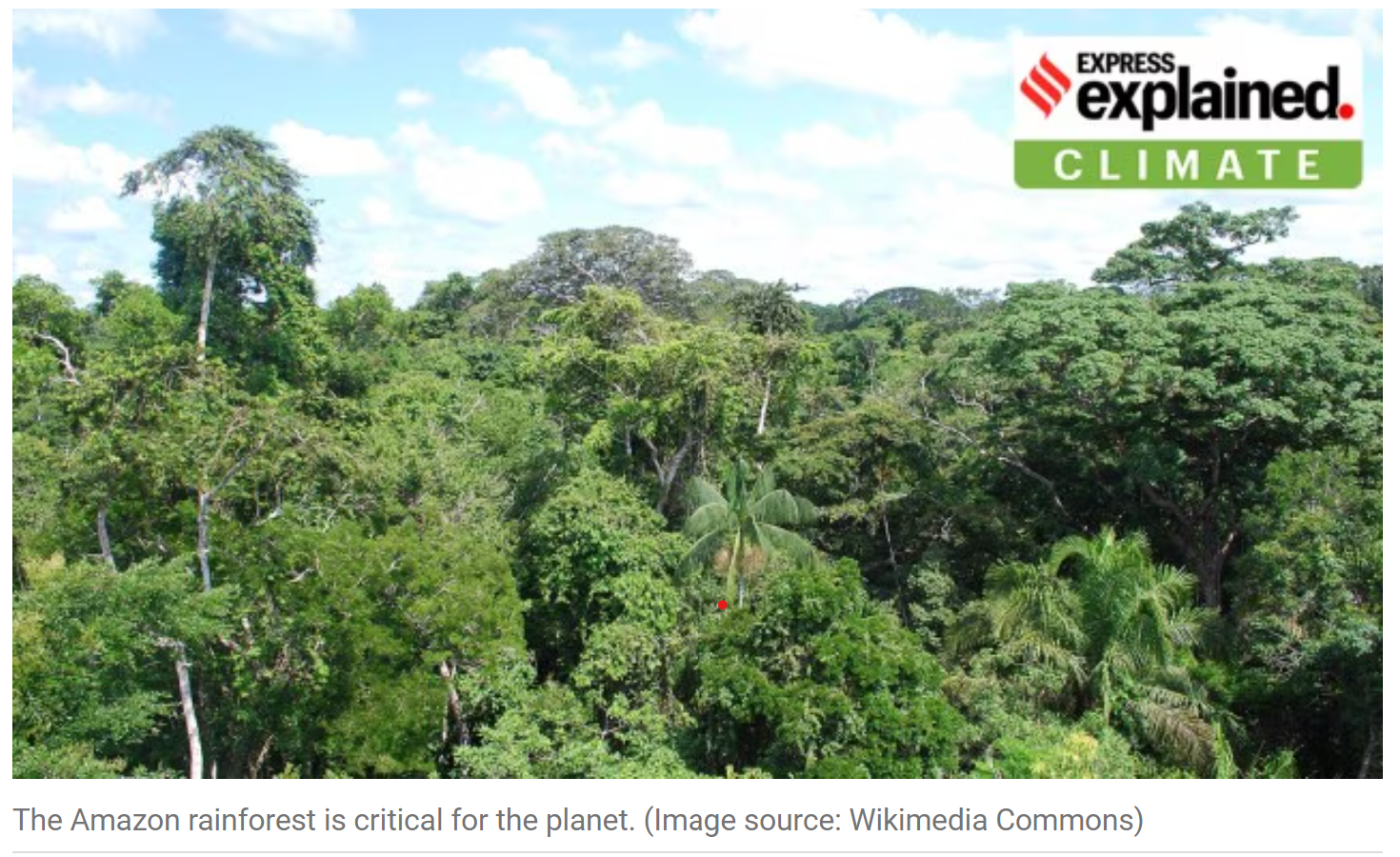
- 12 Sep 2024
In News
- Scientists agree that preserving the Amazon rainforest is critical to combating global warming, but new data published recently, indicate huge swathes of the jungles that are vital to the world’s climate remain unprotected.
- Nearly 40% of the areas of the Amazon rainforest most critical to curbing climate change have not been granted special government protection, as either nature or indigenous reserves, according to an analysis by nonprofit Amazon Conservation.
- The areas lie in the far southwest of the Amazon in Peru and the far northeast in Brazil, French Guiana, and Suriname, the data show.
- Those parts of the Amazon have the biggest, densest trees and the most continuous canopy cover. That means these areas hold the most carbon, which would be released into the atmosphere as climate-warming greenhouse gas if the jungle is destroyed by fire or logging.
What satellite data show
- Amazon Conservation analysed new data from the satellite imaging company Planet that used lasers to get a three-dimensional picture of the forest and combined it with machine-learning models.
- Only aboveground vegetation was considered, and not underground carbon in roots and soils.
- Amazon Conservation’s Monitoring of the Andean Amazon Project (MAAP)’s analysis shows that 61% of the peak carbon areas in the Amazon are protected as indigenous reserves or other protected lands, but the rest generally has no official designation.
- In Brazil, Suriname and French Guiana, only 51% of peak carbon areas are labeled for preservation. Peru protects a higher proportion of its critical areas, but some of the areas that have been left unprotected have been earmarked for logging.
Why the Amazon matters
- MAAP published an analysis last month showing that the Amazon contained 71.5 billion tonnes of carbon, roughly double the global carbon dioxide emissions for 2022. That analysis showed that the Amazon just barely absorbed more carbon than it released in the decade leading up to 2022, a positive signal for the world’s climate.
- But that remains an area of intense debate, with other studies showing the Amazon has flipped to become an emissions source.
- As the effects of anthropogenic climate change become more stark with each passing day, the Amazon becomes one of the most valuable assets for the planet’s health. Scientists say that if the Amazon becomes an emission source instead of a carbon sink — which absorbs carbon from the atmosphere — the impact on the planet may be cataclysmic.
Controversy over Mumbai's salt pans: why do these lands matter?
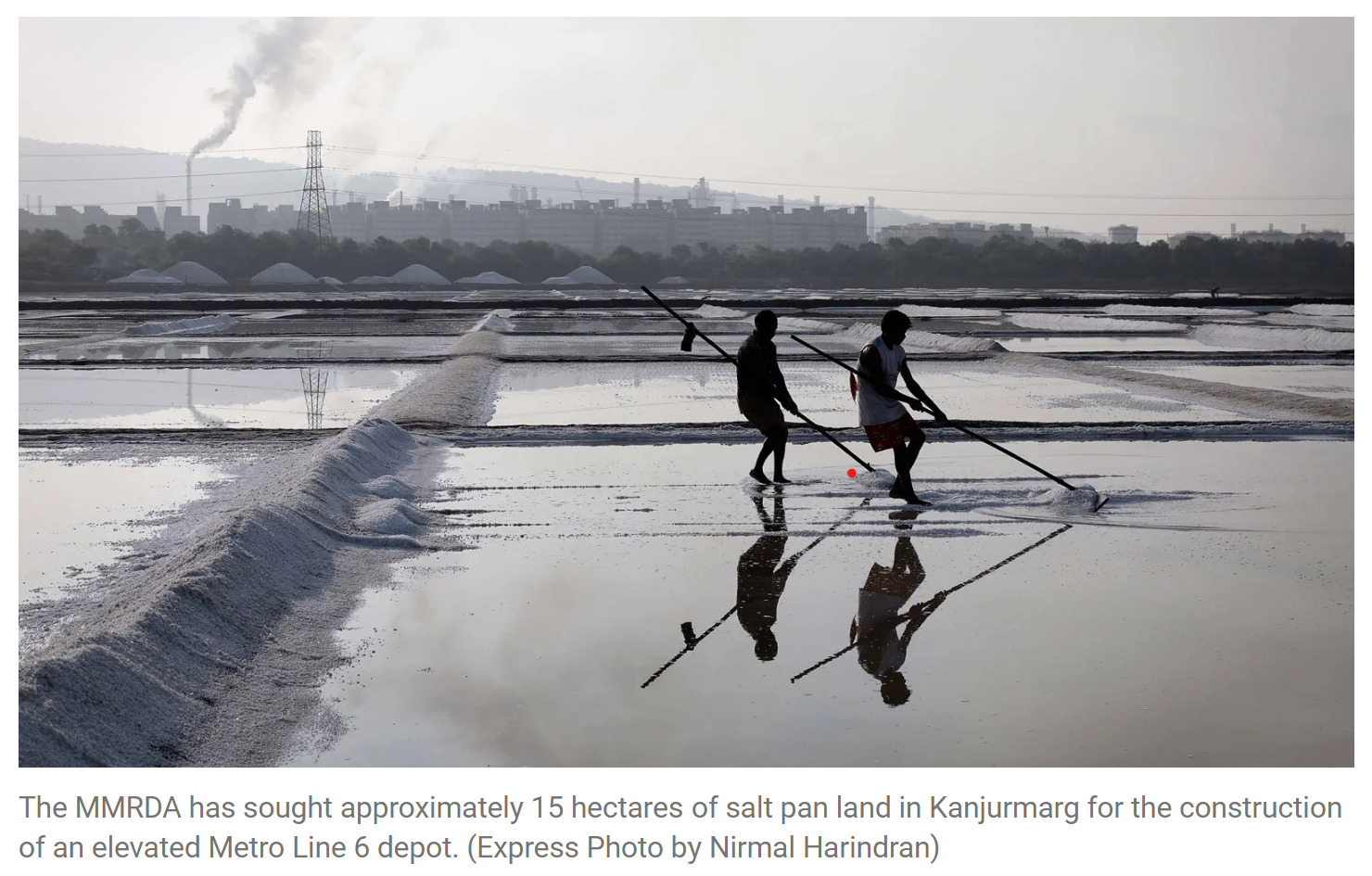
- 12 Sep 2024
In News:
Earlier this month, the Centre approved the transfer of 256 acres of salt pan land in Mumbai to the Dharavi Redevelopment Project Pvt Ltd (DRPPL), a joint venture between Adani Realty Group and the Maharashtra government, for building rental housing for slum dwellers.
What are salt pan lands?
- They comprise parcels of low-lying lands where seawater flows in at certain times, and leaves behind salt and other minerals. Along with Mumbai’s mangroves (also at risk due to development), this ecosystem is instrumental in protecting the city from flooding.
- According to the Coastal Regulation Zone (CRZ) notification of 2011, the ecologically sensitive salt pans fall under CRZ-1B category, where no economic activity is allowed with the exception of salt extraction and natural gas exploration.
- In all, 5,378 acres of land in Mumbai have been designated as salt pan lands, approximately nine times the size of the Dharavi slum. About 31% of this land is located in residential and commercial belts, and roughly 480 acres are encroached upon, a 2014 study by the state government found. The same study found that about 1,672 acres of Mumbai’s more than 5,000 acres of salt pan lands are “developable”.
- Nationally, some 60,000 acres have been demarcated as salt pan lands, spread across Maharashtra, Andhra Pradesh, Tamil Nadu, Odisha, Gujarat, and Karnataka. Andhra Pradesh (20,716 acres) boasts the largest expanse of such land, followed by Tamil Nadu (17,095 acres) and Maharashtra (12,662 acres).
Why are Mumbai’s salt pan lands at risk?
Development Pressure
- Land Scarcity: Mumbai faces severe land scarcity, with its burgeoning population and high demand for space. Salt pans, being some of the last undeveloped areas, are increasingly targeted for various projects.
- Development Plans: Multiple state governments have eyed salt pan lands for different uses.
Environmental Significance
- Flood Prevention: Salt pans are situated in low-lying areas that naturally collect rainwater and tidal flows, helping to mitigate flooding in Mumbai’s eastern suburbs. They act as natural buffers, absorbing excess water during heavy rains and high tides.
- Historical Context: During the July 2005 deluge, salt pans helped reduce the impact of flooding compared to other areas of Mumbai, highlighting their role in flood management.
- Ecosystems: Salt pans are home to various species of birds and insects and contribute to local biodiversity. The destruction of these lands could lead to loss of habitat and disruption of local ecosystems.
Risks of Development
- Flooding Concerns: Environmentalists argue that constructing on these low-lying areas will lead to increased flooding in areas like Vikhroli, Kanjurmarg, and Bhandup. This is because the land’s natural ability to absorb and manage water will be compromised.
- Quality of Life Issues: Relocating slum-dwellers to these areas raises concerns about their living conditions. Salt pans are prone to flooding, which could undermine the quality of life for new residents. The cost of making these lands habitable, including extensive land filling and waterproofing measures, could negate the benefits of affordable housing.
- Conflict with Climate Goals: There is a contradiction between Mumbai’s Climate Action Plan, which recognizes climate threats, and the push to develop areas critical for flood management.
SEMICON 2024
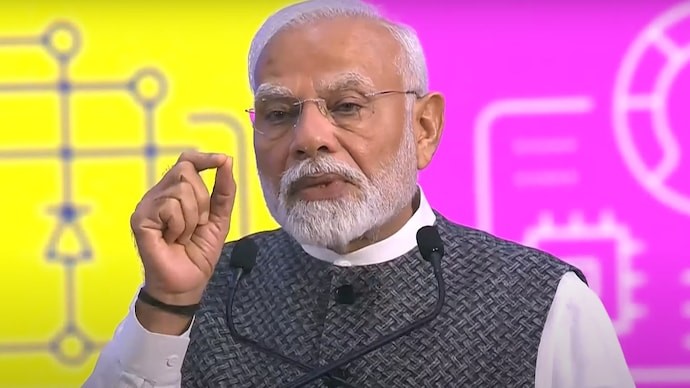
- 11 Sep 2024
In News:
Recently, Prime Minister Narendra Modi addressed the SEMICON 2024 conference on the outskirts of the national capital, advocating for increased investment in semiconductor manufacturing and resilient supply chains.
- Significance of Supply Chains: Emphasized the critical need for resilient supply chains, citing the COVID-19 pandemic as a stark reminder of their importance. The pandemic highlighted vulnerabilities in global supply chains, particularly affecting sectors dependent on chip imports from China.
- Investment in Semiconductors: Modi pitched India as a prime destination for semiconductor investments. He stressed that India aims to have an Indian-made chip in every global device and is committed to becoming a semiconductor powerhouse.
- India's Semiconductor Strategy:
- Reformist Government: Modi highlighted India’s reformist policies and stable business environment as key attractions for semiconductor investments.
- Growing Manufacturing Base: Expanding manufacturing infrastructure in India as a critical factor.
- Aspirational Market: The evolving technology market in India is seen as a strong incentive for semiconductor production.
- Government Commitment: Modi announced that over ?1.5 lakh crore has already been committed to semiconductor manufacturing, with several projects currently in the pipeline.
- Semicon India 2024 Focus:
- Event Goals: SEMICON India 2024 is a three-day conference designed to showcase India’s semiconductor strategies and policies, aiming to position the country as a global hub for semiconductor manufacturing.
- Workforce Development: The government is developing a semiconductor workforce of 85,000 engineers, technicians, and R&D experts.
- Market Growth: India’s semiconductor market, valued at $23.2 billion, is projected to reach $80.3 billion by 2028, with a compound annual growth rate (CAGR) of 17.10%.
- Importance of Semiconductors: Semiconductor chips as crucial for fulfilling the aspirations of millions and noted their role in India’s Digital Public Infrastructure (DPI), which remained effective during the pandemic when other countries’ banking systems struggled.
- Event Participation: SEMICON India 2024 will feature over 250 exhibitors and 150 speakers, including top executives from global semiconductor companies, industry leaders, businesses, and experts from around the world.
PresVu

- 11 Sep 2024
According to the company, the eye drop PresVu is the first of its kind in India, and that Entod has “applied for a patent for this invention in terms of its formulation and the process”.
Mumbai-based Entod Pharmaceuticals has announced that the Drug Controller General of India (DCGI) — the country’s apex drug regulator — has approved its new eye drop, which has been “specifically developed to reduce dependency on reading glasses for individuals affected by presbyopia.”
According to the company, the eye drop PresVu is the first of its kind in India, and that Entod has “applied for a patent for this invention in terms of its formulation and the process”.
What is presbyopia?
Presbyopia is an age-related condition in which the eyes gradually lose the ability to focus on nearby objects. People usually start to develop presbyopia at around the age of 40. According to doctors, spectacles are one of the most effective ways to manage the condition.
How does PresVu work?
- The active ingredient — chemical compounds in medicines that have an effect on the body — in PresVu is pilocarpine. The compound contracts the iris muscles, which control the size of the pupil and help humans see things clearly, thereby enabling one’s eyes to focus better on nearby objects, according to Entod Pharmaceuticals.
- The company also said that PresVu uses “advanced dynamic buffer technology” — essentially, a base solution — to adapt to the pH level (a scale used to measure how acidic or basic a substance is) of tears. This ensures that the eye drop has “consistent efficacy and safety for extended use, keeping in mind that such drops will be used for years at a stretch”.
- PresVu is a prescription-only medicine and, according to doctors, its impact is unlikely to last beyond four to six hours. It should not be used by people who have inflammation of the iris. Regular use of PresVu may lead to itching and redness, eyebrow pain, and muscle spasms in the eyes.
Is this a novel therapy?
- Although Entod’s claims make it seem that PresVu is a new therapy, pilocarpine, the main compound used in the eye drop, has been available in India for decades now.
- The United States Food and Drug Administration approved a pilocarpine eye drop for presbyopia in 2021.
- In India, the government decides on the ceiling price of pilocarpine in 4% and 2% concentrations. PresVu has pilocarpine in 1.25% concentration.
Strengthening India-UAE Relations
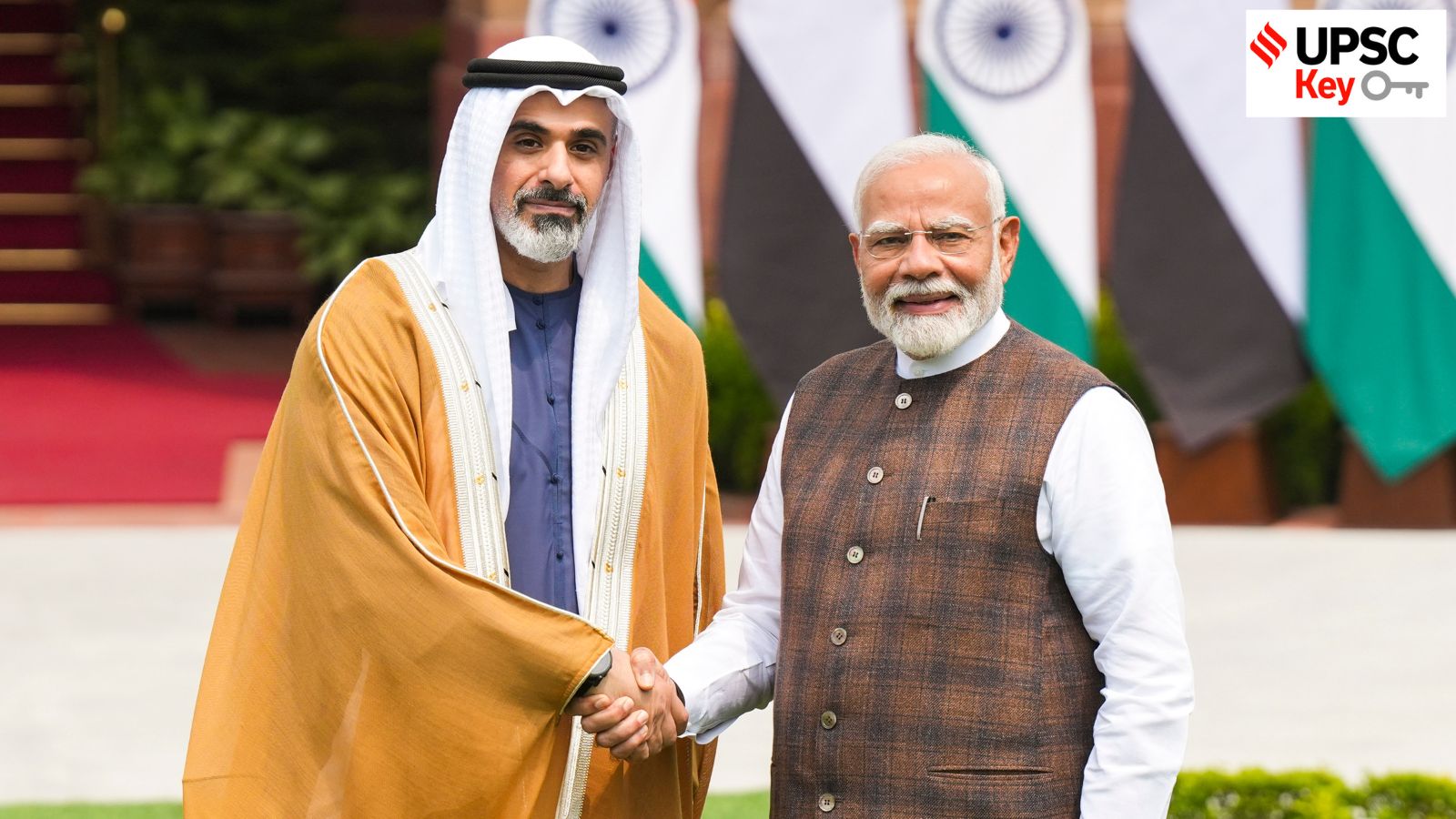
- 11 Sep 2024
The bilateral relationship between India and the UAE has flourished in recent years, marked by deepening strategic ties and multifaceted collaboration. The recent visit of Abu Dhabi's Crown Prince to India highlights the growing importance of this partnership. The UAE is now India's second-largest export destination, third-largest trading partner, and fourth-largest investor. The Comprehensive Economic Partnership Agreement (CEPA), effective from May 2022, has been transformative, boosting total trade by nearly 15% and increasing non-oil trade by 20% in the 2023-24 period.
Significance of the UAE for India
- Economic Gateway: The UAE is a crucial entry point for India into the Middle East and North Africa (MENA) region. As India's third-largest trading partner, bilateral trade reached USD 84.5 billion in FY 2022-23. The CEPA, removing tariffs on 80% of Indian exports to the UAE, has led to a 5.8% increase in non-oil trade early in 2023 and is expected to elevate trade to USD 100 billion by 2030. The UAE’s strategic location and infrastructure make it an ideal hub for re-exporting Indian goods to Africa and Europe.
- Energy Security: The UAE is India's fourth-largest crude oil supplier, with oil imports surging by 81% in January 2024. The partnership extends to renewable energy projects, aligning with India's goal of 500 GW renewable energy capacity by 2030, underscoring the UAE's role in India's energy transition.
- Investment Catalyst: FDI from the UAE to India has increased more than threefold, reaching USD 3.35 billion from USD 1.03 billion in 2021-22. The UAE-India High-Level Joint Task Force on Investments has played a key role, with significant investments like the Abu Dhabi Investment Authority’s Rs 4,966.80 crore in Reliance Retail Ventures Limited.
- Strategic Partner: The UAE has become a vital strategic ally for India in counterterrorism and maritime security. The bilateral naval exercise "Zayed Talwar" in 2021 and India's access to the UAE’s Al Dhafra air base highlight the expanding defense cooperation between the two nations.
- Remittances and Soft Power: The 3.5 million-strong Indian diaspora in the UAE is a major source of remittances and cultural influence. In 2022, India received nearly USD 111 billion in global remittances, with the UAE as a significant contributor. The diaspora also strengthens cultural ties, as evidenced by the BAPS Hindu Temple in Abu Dhabi, symbolizing the UAE’s commitment to religious tolerance.
- Tech and Innovation Hub: The UAE-India partnership is increasingly focused on technology and innovation. The I2U2 group (India, Israel, UAE, USA) aims to enhance cooperation in clean energy and food security. The UAE’s USD 2 billion investment in food parks in India and the UAE-India Artificial Intelligence Bridge, launched in 2018, facilitate joint research and position both countries at the forefront of technological advancement.
Areas of Friction
- Labor Rights: Persistent labor rights issues for Indian workers in the UAE, including passport confiscation and wage theft, remain a concern.
- Geopolitical Tensions: India’s growing ties with Israel and the UAE’s normalization with Israel complicate the geopolitical landscape, potentially entangling India in regional rivalries, especially with Iran. The UAE’s increasing ties with China also add strategic complexity.
- Energy Transition: Both nations’ commitments to net-zero targets—India by 2070 and the UAE by 2050—pose challenges to their traditional hydrocarbon-based relationship.
- Trade Imbalance: Despite growing trade, India’s trade deficit with the UAE stood at USD 16.78 billion in FY 2022-23. While the CEPA aims to address this, diversifying trade beyond hydrocarbons remains a challenge.
- Maritime Security: Coordinating responses to maritime security threats while respecting strategic autonomy is challenging. The UAE’s expanding naval presence and India’s growing maritime footprint require careful coordination.
Enhancing Relations
- Digital Diplomacy: India could use its IT capabilities to develop digital platforms for collaboration, including a real-time trade portal and a joint innovation hub, and expand cross-border digital payments.
- Green Energy Corridor: Proposing an "India-UAE Green Energy Corridor" could align with both nations’ climate goals through joint investments and research in renewable energy.
- Skill Bridge Program: A "Skill Bridge Program" could upskill Indian workers for the UAE job market, focusing on emerging sectors like AI and sustainable technologies.
- StartUp Synergy Scheme: Developing a "StartUp Synergy Scheme" could foster collaboration between Indian and UAE startups through joint incubation programs and market access facilitation.
- Maritime Cooperation Blueprint: Creating a comprehensive "India-UAE Maritime Cooperation Blueprint" could enhance collaboration in maritime security, blue economy initiatives, and port development, including joint patrols and deep-sea ports.
Polaris Dawn Mission: First Private Spacewalk Attempt

- 11 Sep 2024
Recently, a SpaceX Falcon 9 rocket launched from Florida, carrying American billionaire Jared Isaacman and three other astronauts into orbit for the Polaris Dawn mission. This five-day mission marks a milestone as it aims to achieve the world’s first private spacewalk. Polaris Dawn is the inaugural flight of the Polaris Program, a collaborative effort between Isaacman and SpaceX, led by Elon Musk. The program's goal is to develop innovative technologies for future Mars missions.
What is a Spacewalk?
A spacewalk, or “extravehicular activity” (EVA), involves an astronaut conducting activities outside a spacecraft while in space. The concept of a spacewalk dates back to March 18, 1965, when Soviet cosmonaut Alexei Leonov performed the first EVA during the Space Race. Leonov's spacewalk lasted just 10 minutes.
Modern spacewalks typically occur outside the International Space Station (ISS) and can last between five and eight hours. Astronauts conduct spacewalks for various purposes, such as performing scientific experiments, testing new equipment, or repairing satellites and spacecraft.
During a spacewalk, astronauts wear specially designed spacesuits and use safety tethers to prevent floating away into space. These tethers have one end attached to the astronaut and the other secured to the spacecraft. An alternative safety device is the SAFER (Simplified Aid for EVA Rescue), a backpack with small jet thrusters controlled by a joystick, which helps astronauts maneuver in space.
Objectives of the Polaris Dawn Mission
The Polaris Dawn mission, utilizing SpaceX’s Dragon capsule, aims to reach an altitude of approximately 1,400 km from Earth. This altitude exceeds the previous record set by NASA’s Gemini XI mission in 1966, which reached 1,372 km. At this height, the mission will be deep within the Van Allen radiation belts, which start around 1,000 km altitude and are known for their high levels of radiation. The crew will study the effects of spaceflight and radiation on human health.
Following this high-altitude phase, the Dragon capsule will descend to a lower orbit to facilitate the spacewalk scheduled for the third day of the mission, Thursday. During the spacewalk, the capsule will be depressurized, and the hatch will open, exposing the interior to the vacuum of space. Only two crew members, Isaacman and Gillis, will exit the capsule, while Poteet and Menon will remain inside to manage safety tethers and monitor the mission’s status.
The primary objective of the spacewalk is to test SpaceX’s newly developed EVA spacesuits. These suits, designed specifically for this mission, feature built-in cameras and heads-up displays to provide real-time information about the suit's condition. They also incorporate advanced thermal management systems.
After the spacewalk, Isaacman and Gillis will return to the capsule, which will then be repressurized before resuming its mission activities.
Additional Mission Activities
Throughout the mission, the crew will conduct 40 scientific experiments. These include attempting to capture X-ray images using natural space radiation instead of traditional X-ray equipment. The mission will also test SpaceX’s Starlink satellite network for laser-based communication, allowing satellite-to-satellite communication without relying on ground-based infrastructure.
Good Digital Public Infrastructure
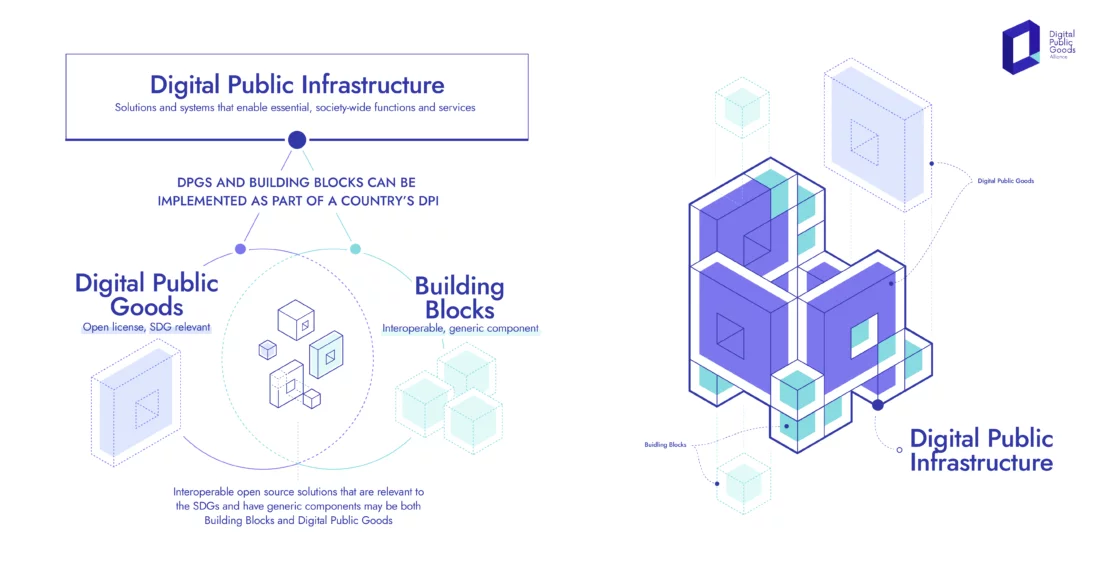
- 08 Sep 2024
Good digital public infrastructure (DPI) integrates technology with societal needs, ensuring that it is secure, scalable, and inclusive.
India’s achievement of over 80% financial inclusion in just six years has drawn international praise, particularly as a model for the Global South. This accomplishment underscores India’s success in achieving both digital and financial inclusion for over a billion people. Consequently, the G20 summit in New Delhi in 2023 highlighted the critical role of digital public infrastructure.
In response, India’s G20 task force has released a comprehensive report outlining a global strategy for DPI development. This positions India to support other nations in achieving digital sovereignty, financial inclusion, and self-reliance.
The evolving digital landscape is marked by a variety of stakeholders—including private enterprises, government bodies, non-profits, and think tanks—each working to advance their DPI solutions. This raises two key questions: How can we identify genuine and reliable DPIs from the plethora available? And what differentiates a “good DPI” from a “bad DPI”?
Identifying effective DPI involves assessing how well technology meets societal needs while ensuring security, scalability, and inclusivity. Authenticity and adherence to core principles are essential for evaluating DPIs.
The Citizen Stack Model
Citizen Stack, built upon the proven success of India Stack, emerges as a trusted ecosystem in digital infrastructure. India Stack, a robust digital platform, has demonstrated its effectiveness and security on a vast scale, serving over a billion citizens. This strong foundation enhances Citizen Stack’s credibility and reliability. Unlike DPI manufacturers, Citizen Stack functions as a regulatory body or auditor, certifying and authenticating DPIs to ensure they meet high standards of quality and security.
Citizen Stack’s approach is comprehensive, focusing on security, scalability, and inclusivity. The DPI platforms approved by Citizen Stack are designed to meet the diverse needs of large populations while maintaining stringent security measures to protect user data and privacy. As an auditor, Citizen Stack ensures that certified DPIs are dependable, secure, and beneficial to the public.
In an era of abundant digital solutions and promises, distinguishing genuinely reliable platforms is essential. Citizen Stack offers assurance as a gold standard for DPI solutions.
Guiding Principles of a “Good DPI”
Citizen Stack has established five core principles—referred to as sutras—that define a good DPI:
- Maintain Citizen Relationships: Ensure that digital infrastructure supports a fair relationship between citizens, the market, and the state, free from undue influence.
- Protect Empowerment and Privacy: Implement consent-based data sharing systems that prioritize individual empowerment and privacy.
- Prevent Monopolistic Lock-In: Ensure interoperability to avoid citizens being restricted by monopolistic entities.
- Combine Techno-Legal Regulation: Integrate technology with legal frameworks to govern ethical tech use, ensuring innovation while safeguarding security and societal rights.
- Foster Public-Private Innovation: Encourage collaboration between public and private sectors, while avoiding corporate dominance. The focus should be on public good rather than corporate monopolies, and technology should prevent exploitation by state or corporate actors.
Barakah Nuclear Energy Plant

- 08 Sep 2024
Location: Situated in Al Dhafra, Emirate of Abu Dhabi.
Specifications:
- Reactor Count: Four nuclear reactors.
- Annual Output: 40 terawatt-hours (TWh) of electricity.
Objective and Significance:
- Energy Diversification: The plant is a key component of the UAE’s energy diversification efforts, providing clean and efficient power.
- Environmental Impact: It is projected to reduce carbon emissions by up to 22 million tons annually, equivalent to removing 4.8 million cars from the roads.
International Nuclear Energy Agreements
Purpose: Nuclear energy agreements are bilateral or multilateral treaties focused on the peaceful use of nuclear energy. They facilitate international cooperation in areas such as technology transfer, fuel supply, safety standards, and non-proliferation.
India’s Nuclear Energy Agreements:
- General Overview: India has established civil nuclear cooperation agreements with various countries including France, the United States, Russia, Namibia, Canada, Argentina, Kazakhstan, South Korea, Australia, Sri Lanka, and the United Kingdom.
Key Agreements:
- India-Russia: A longstanding partnership since the Cold War, with Russia significantly contributing to the construction of the Kudankulam Nuclear Power Plant in Tamil Nadu.
- India-US Civil Nuclear Agreement (2008): Known as the 123 Agreement, it marked India’s entry into the global nuclear market despite its non-signatory status to the Nuclear Non-Proliferation Treaty (NPT). This agreement enabled India to engage in nuclear trade with the US and other Nuclear Suppliers Group (NSG) members.
- India-France Civil Nuclear Agreement (2008): This agreement allows France to supply nuclear technology and fuel to India, including involvement in the proposed Jaitapur Nuclear Power Project in Maharashtra.
- India-Canada Nuclear Cooperation Agreement (2010): This historic deal marked a return to cooperation after a hiatus following Canada's sanctions in 1974, allowing uranium supply for India’s civilian reactors.
- India-Japan Nuclear Agreement (2016): This agreement facilitates the export of nuclear technology from Japan to India, reflecting Japan’s confidence in India's non-proliferation commitments.
- India-Kazakhstan: Agreements with Kazakhstan for uranium supply, given Kazakhstan’s status as a major uranium producer.
- India-Australia Civil Nuclear Cooperation Agreement: Permits Australia to export uranium for India’s civilian nuclear program. Notably, Australia typically exports uranium only to NPT signatories.
- India-United Kingdom Nuclear Agreement (2015): This agreement promotes collaboration on nuclear technology and research between India and the UK.
- India-UAE Civil Nuclear Energy Cooperation: Recently, India and the United Arab Emirates (UAE) formalized their collaboration in civil nuclear energy through an MoU.
Swachh Bharat Mission averted 60,000-70,000 infant deaths annually: Study
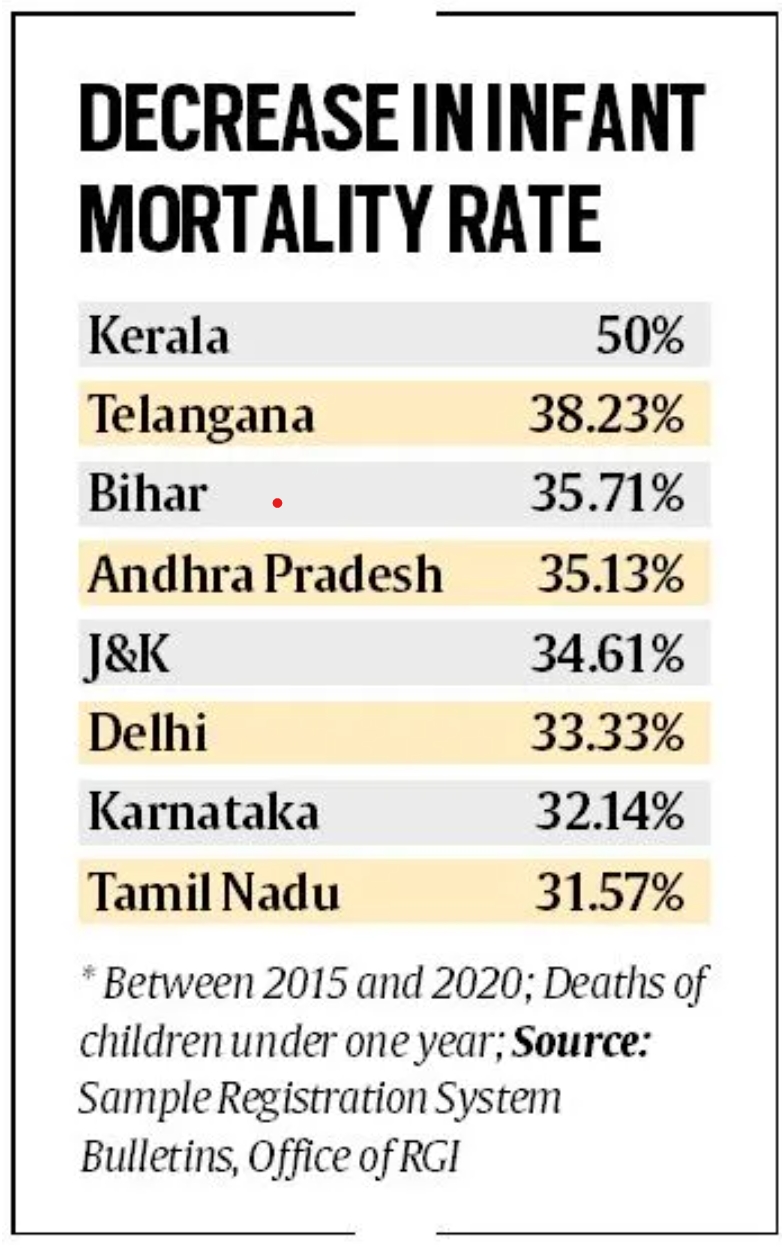
- 09 Sep 2024
- Launched on October 2, 2014, the Swachh Bharat Mission (SBM) has been pivotal in advancing sanitation infrastructure in India.
- By 2020, the mission had facilitated the construction of over 11 crore household toilets under its Grameen component and over 63 lakh individual and 6.36 lakh community public toilets under its Urban component. This extensive sanitation drive aimed at eradicating open defecation and improving public health.
Impact on Infant Mortality
A recent study published in Nature has highlighted the significant health benefits resulting from SBM. According to the report, titled ‘Toilet Construction under the Swachh Bharat Mission and Infant Mortality in India,’ the initiative may have averted approximately 60,000 to 70,000 infant deaths annually between 2014 and 2020. The study, analyzed data from 35 states and 640 districts from 2011 to 2020, focusing on the infant mortality rate (IMR) and under-five mortality rate (U5MR).
Key Findings
- Decrease in Infant Mortality:
- The study established an inverse relationship between toilet access and infant mortality. It noted that districts with increased toilet coverage saw a marked decline in infant deaths.
- In 2003, the average toilet coverage in districts was below 40%, rising to over 60% by 2020. Correspondingly, infant mortality rates fell from an average of 48.9 per 1,000 live births in 2003 to 23.5 per 1,000 live births in 2020.
- Significant Decline:
- The research observed a substantial decline in infant mortality rates from 40 per 1,000 live births in 2012 to below 30 per 1,000 live births by 2019.
- The mortality rate for children under five also dropped from about 44 per 1,000 live births in 2012 to below 30 by 2019.
- Regional Variations:
- Despite the overall improvement, certain regions like parts of Uttar Pradesh, Madhya Pradesh, Odisha, and Andhra Pradesh continued to report higher infant mortality rates, ranging between 45-60 per 1,000 live births in 2020.
Conclusion
The SBM has demonstrably improved sanitation in India, with a notable reduction in infant mortality rates attributed to the increased availability of household toilets. While the mission has achieved significant progress, ongoing efforts and investments in broader public health infrastructure are essential to address persistent regional disparities and sustain health gains.
Jal Sanchay Jan Bhagidari Initiative
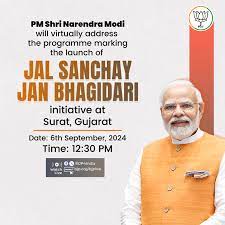
- 09 Sep 2024
In News:
Prime Minister Shri Narendra Modi recently launched the ‘Jal Sanchay Jan Bhagidari’ initiative via video conferencing from Surat, Gujarat.
Key Points:
- Campaign and Objectives:
- Objective: The initiative seeks to bolster water conservation through extensive public and governmental collaboration.
- Scope: About 24,800 rainwater harvesting structures will be constructed across Gujarat.
- Approach: Emphasizes a Whole-of-Society and Whole-of-Government approach to water management.
- Significance:
- Cultural Significance: PM Modi highlighted that water conservation is deeply embedded in Indian culture, with water revered as a divine entity and rivers considered Goddesses.
- Policy and Virtue: He stated that water conservation transcends policy and is both an effort and a virtue, reflecting social commitment and cultural consciousness.
- Future Challenges: The Prime Minister acknowledged the exacerbating impact of water scarcity due to climate change, urging a shift to the ‘Reduce, Reuse, Recharge, and Recycle’ mantra for sustainable water management.
- Impact of Drought and Water Scarcity:
- Recent Challenges: The drought affecting the Amazon region and other parts of India has highlighted the urgent need for effective water conservation strategies.
- Water Table Decline: Significant declines in river levels, such as the Rio Negro reaching its lowest minimum (12.7 meters) on record, and the death of endangered species due to low water levels underscore the crisis.
- Government Initiatives:
- Jal Jeevan Mission: Aims to provide piped water to every home, with significant progress noted from 3 crore households to over 15 crore.
- Jal Shakti Abhiyan: Focuses on renovation and construction of water sources with widespread public participation.
- Amrit Sarovar: Over 60,000 Amrit Sarovars have been constructed under this campaign, which began during the Azadi Ka Amrit Mahotsav.
- Innovative Solutions and Technological Integration:
- Drip Irrigation: Promotion of water-efficient farming techniques like drip irrigation to ensure sustainable agriculture.
- Support for Farmers: Encouragement for cultivating less water-intensive crops such as pulses and millets.
- Role of Industries:
- CSR Contributions: Industries have played a significant role in water conservation through initiatives like Net Zero Liquid Discharge Standards and the completion of 10,000 borewell recharge structures in Gujarat.
- Future Plans: The ‘Jal Sanchay-Jan Bhagidari Abhiyan’ aims to create an additional 24,000 recharge structures.
- Conclusion and Vision:
- Global Leadership: PM Modi expressed his belief that India can become a global leader in water conservation.
- Public Movement: Stressed the importance of continuing public participation in water conservation to make India a model for global sustainability.
Background: The ‘Jal Sanchay Jan Bhagidari’ initiative builds on the success of the earlier Jal Sanchay program by involving citizens, local bodies, and industries in water conservation efforts. The initiative aligns with the vision of water security and aims to mobilize collective action for long-term sustainability.
Key Data:
- Construction of 24,800 rainwater harvesting structures.
- Significant increase in tap water connections from 3 crore to over 15 crore households.
- Creation of more than 60,000 Amrit Sarovars across the country.
- Completion of 10,000 borewell recharge structures in Gujarat.
Uncommon Cyclones in the Arabian Sea
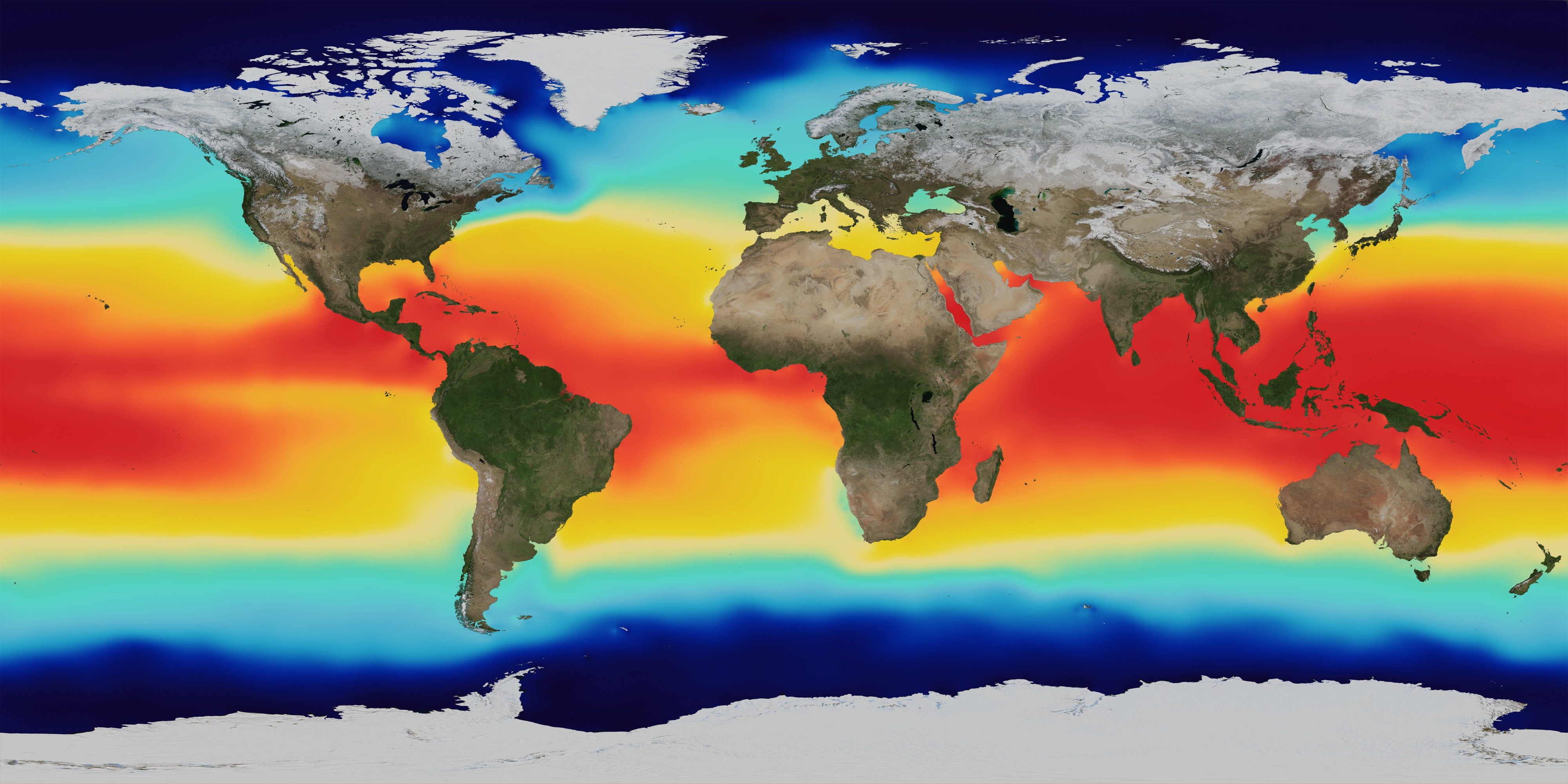
- 09 Sep 2024
Cyclones are intense weather systems with low atmospheric pressure and rotating winds, forming over warm tropical waters. These storms cause severe weather, including heavy rainfall, strong winds, and storm surges. Cyclones are categorized based on wind speeds, from tropical depressions to severe cyclonic storms. Warm ocean surfaces and high humidity fuel these storms, with atmospheric conditions like wind shear and moisture influencing their strength and formation.
The North Indian Ocean plays a key role in global weather systems, particularly the summer monsoon. Warm waters from the Arabian Sea and Bay of Bengal are crucial for moisture generation during monsoon seasons. However, despite the warm ocean surfaces that typically promote cyclones, this region has fewer cyclones compared to other tropical oceans. A mix of factors—both promoting and suppressing cyclone formation—makes the North Indian Ocean a unique and less cyclone-prone area.
The Indian Ocean stands out due to its monsoonal circulation, marked by seasonal wind reversals north of the equator. It also has "oceanic tunnels" connecting it to the Pacific and Southern Oceans, which influence its weather. The Pacific tunnel introduces warm water into the upper layers, while the Southern Ocean brings cooler waters into deeper levels. These oceanographic features contribute to distinct weather patterns, including influencing the formation and behavior of cyclones.
As the pre-monsoon season begins and the Sun moves into the northern hemisphere, the Arabian Sea rapidly warms. The Bay of Bengal, typically warmer, heats further, driving atmospheric convection and rainfall. These warming patterns make the Bay of Bengal more prone to cyclones, while the Arabian Sea, with its cooler waters and stronger wind shear, experiences less cyclone activity. These conditions contribute to significant differences in cyclone formation between the two seas.
Impact of Climate Change on Cyclones in the Indian Ocean
Climate change is amplifying the Indian Ocean’s warming, bringing in more heat from the Pacific Ocean while the Southern Ocean pushes warmer waters into deeper layers. These changes, combined with shifts in winds and atmospheric humidity, are causing the Indian Ocean to warm at a rapid pace. This warming is affecting cyclone formation, increasing the frequency and intensity of storms. The Indian Ocean acts as a "clearinghouse" for ocean warming, impacting global weather patterns and intensifying cyclone activity.
Monsoon and Cyclone Seasons in the North Indian Ocean
- The monsoon heavily influences cyclone activity in the region. During the monsoon, strong winds cool the Arabian Sea, reducing the likelihood of cyclone formation. In contrast, the Bay of Bengal sees more low-pressure systems, although many do not become cyclones due to wind shear that weakens their energy.
- The North Indian Ocean experiences two distinct cyclone seasons—pre-monsoon and post-monsoon—unlike other regions that typically have just one. Cooler temperatures and stronger wind shear keep cyclone numbers low in the Arabian Sea, compared to the Bay of Bengal.
- Cyclone Asna, formed in August 2023, was a rare cyclone for this time of year. It developed from a land-based depression that moved over the Arabian Sea, marking the first August cyclone in the region since 1981. This rare occurrence highlights how rapidly warming oceans, influenced by climate change and El Niño, can drive unexpected cyclone formations.
Typhoon Yagi
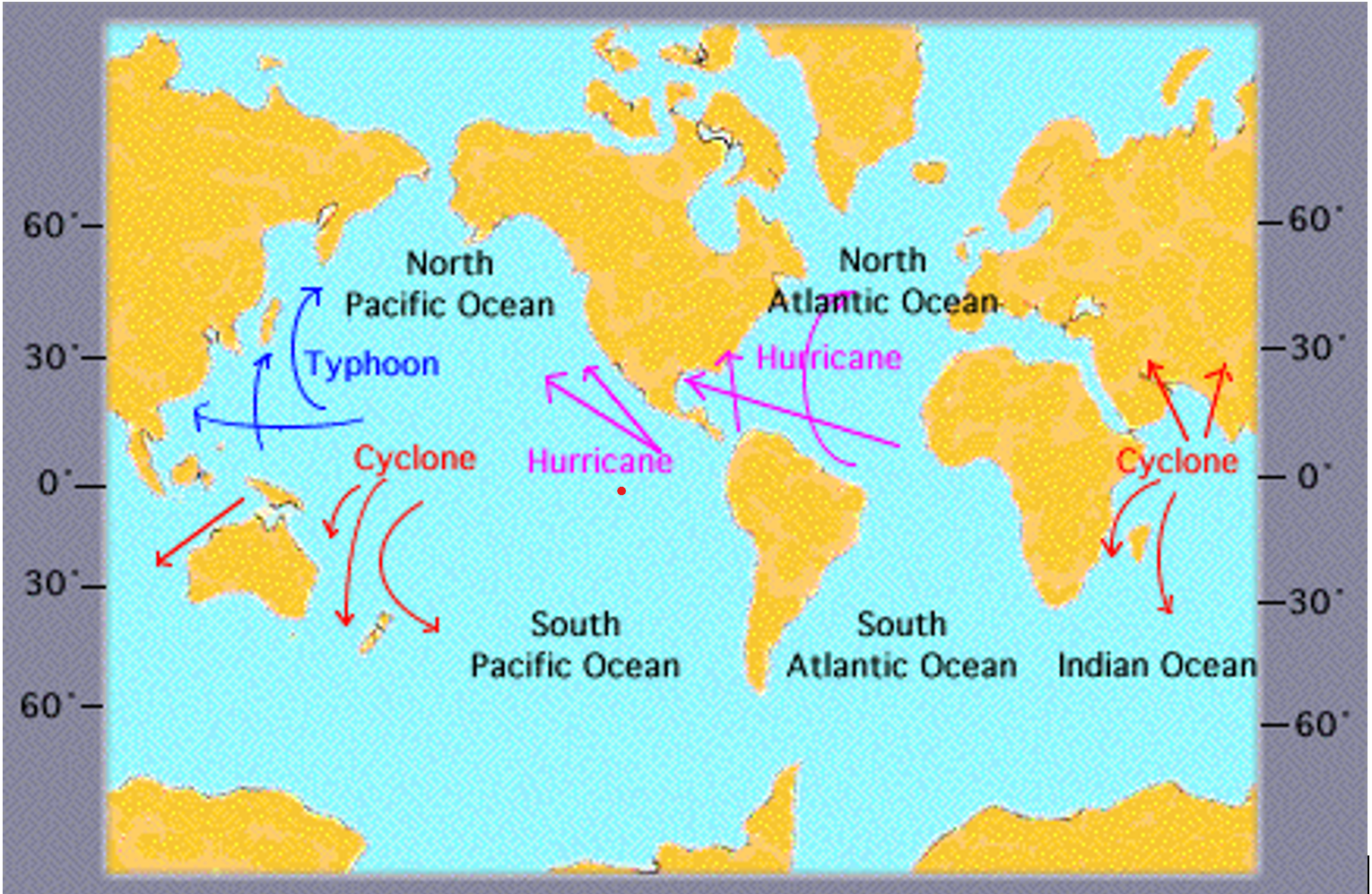
- 10 Sep 2024
In News:
A devastating series of events unfolded in Vietnam, as a bridge collapsed and a bus was swept away by severe flooding, raising the death toll to at least 65. The fatalities are attributed to Typhoon Yagi and the subsequent heavy rains, which have wreaked havoc across the Southeast Asian country.
In Depth:
- The typhoon made landfall in Vietnam’s northern coastal provinces of Quang Ninh and Haiphong with wind speeds of up to 149 kilometers per hour (92 miles per hour) on Saturday afternoon.
- It raged for roughly 15 hours before gradually weakening into a tropical depression early Sunday morning.
- Vietnam’s meteorological department predicted heavy rain in northern and central provinces and warned of floods in low-lying areas, flash floods in streams and landslides on steep slopes.
What is a cyclone?
- The term 'Cyclone' is derived from the Greek word 'Cyclos' which means 'Coiling of the Snake'.
- Cyclones are created by atmospheric disturbances around a low-pressure area and are usually accompanied by violent storms and severe weather conditions. Basically, a tropical cyclone is a deep low-pressure area.
In a first, critically endangered elongated tortoise spotted in Aravallis
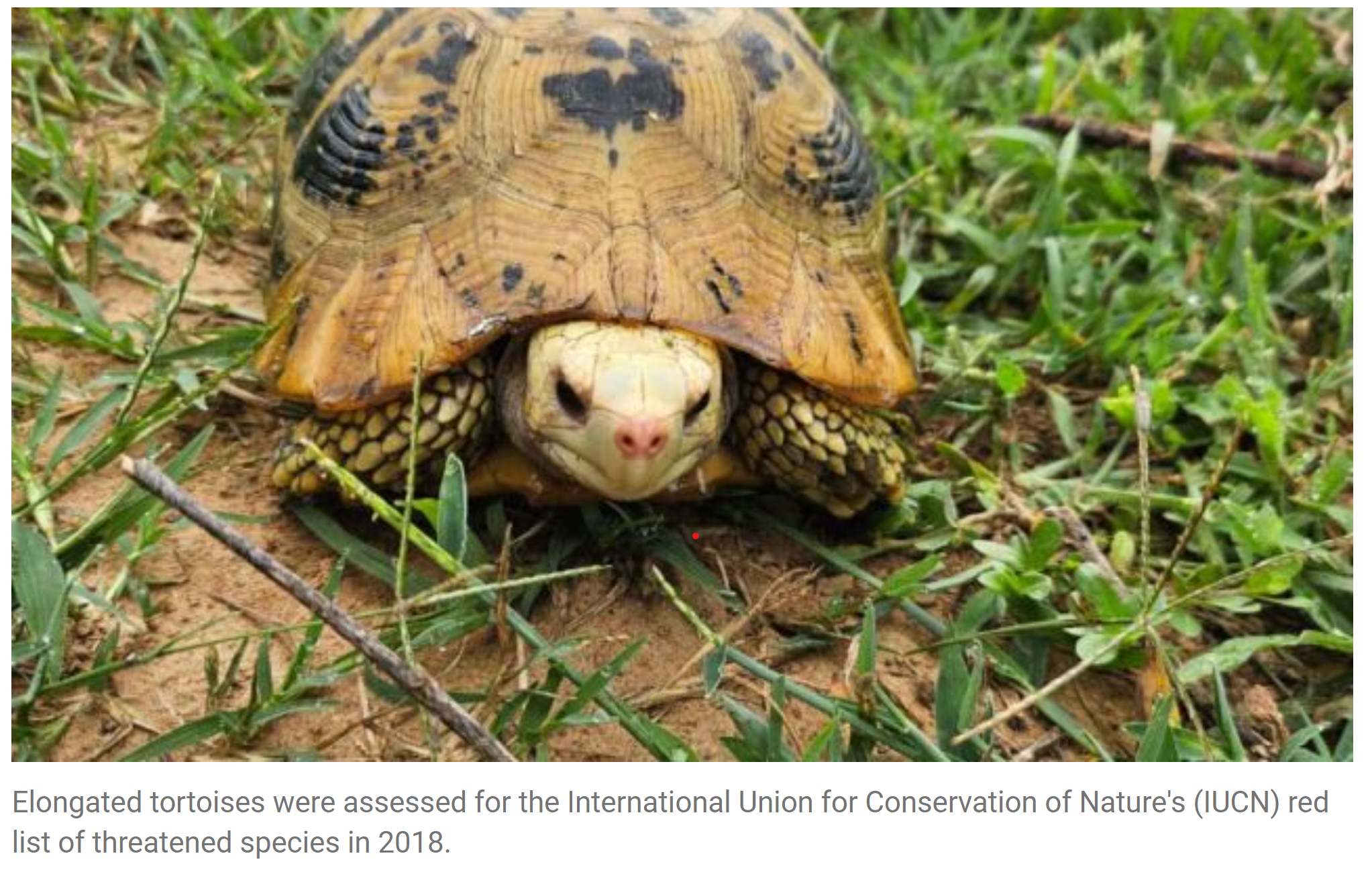
- 10 Sep 2024
In News:
- A critically endangered species, the elongated tortoise (Indotestudo elongata), was spotted in Haryana’s Damdama area during a research survey in the Aravallis.
Key Features:
- The tortoise is medium-sized with a yellowish brown or olive shell and distinct black blotches at the centre of each scute.
- The tortoise has on its nostril a pink ring, which appears in the breeding season.
- Mature individuals of both sexes develop a distinct pinkish colouration surrounding the nostrils and eyes during the season.
- Habitat:
- The tortoise, found in the Sal deciduous and hilly evergreen forests, is distributed across Southeast Asia from northern India, Nepal, Bhutan, and Bangladesh in the west, eastward through Myanmar, Thailand, and all of Indochina, north to Guangxi Province of China and south to Peninsular Malaysia.
- A disjunct tortoise population exists in the Chota Nagpur plateau in eastern India. It also inhabits lowlands and foothills of up to 1,000 m above sea level.
- There have not been enough surveys to ascertain its presence in Aravallis, but the tortoise is found in the foothills of the Himalayas.
- It inhabits wetter areas and discovering it here is an aberration than a norm, adding it cannot be ruled out that the tortoise was brought by trade.
Conservation Status:
- International Union for Conservation of Nature’s (IUCN) Status: Critically Endangered, under criteria A2cd.
Threats:
- Currently, I. elongata is heavily exploited for food and traditional medicine throughout its range.
- Local people often opportunistically capture tortoises while farming or extracting other forest resources. However, deliberate hunting also occurs and dogs continue to be widely used for finding tortoises.
India-Singapore Relations
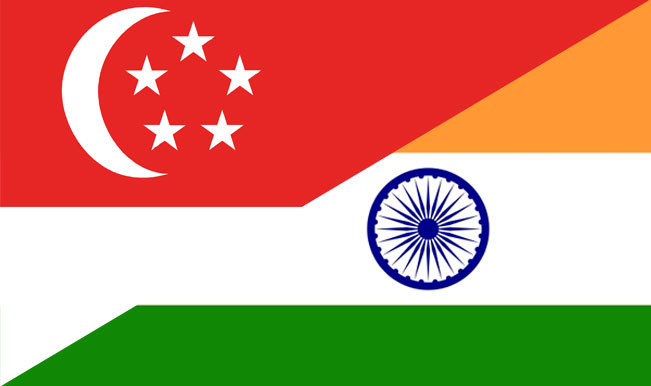
- 04 Sep 2024
- High-Level Inter-Governmental Contacts:
- Frequent and high-level exchanges, including the Prime Minister's upcoming visit.
- Recent second India-Singapore Ministerial Roundtable with senior Indian ministers.
- Key Areas of Cooperation:
- Digitalisation, skills development, sustainability, healthcare, advanced manufacturing, and connectivity.
- Broader contacts include parliamentary and judicial exchanges.
- Economic Ties:
- Singapore is India’s largest trading partner among ASEAN countries and the sixth largest globally.
- Singapore is also the largest source of foreign direct investment (FDI) for India.
- People-to-People Exchanges:
- Large concentration of IIT and IIM alumni in Singapore.
- Historical ties, including the Indian National Army's presence and the contributions of early Indian diaspora in Singapore.
- Regional Policy and Strategic Importance:
- Singapore has supported India’s “Look East” and “Act East” policies.
- Facilitated India’s dialogue partnership with ASEAN.
- Regional implications due to Myanmar’s instability, with India and Singapore both having stakes.
- Defence and Maritime Cooperation:
- Important defence component and maritime collaboration.
- Focus on the Indo-Pacific region amidst growing Chinese influence and new regional architectures like the QUAD.
- Trade and Economic Outlook:
- The visit provides an opportunity to review and expand trade and economic partnerships.
- Potential for increased Chinese FDI into India, with Singaporean entities likely to play a role.
- Complementarities and Challenges:
- Singapore's role as a global trading and investment hub complements India’s economic landscape.
- Highlights India's regulatory and structural inefficiencies, pointing to areas needing improvement for enhanced bilateral cooperation.
23rd Law Commission of India
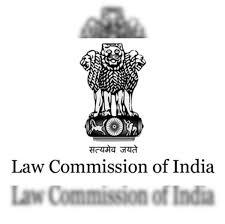
- 06 Sep 2024
Constitution and Tenure:
- Notification and Term:
- The 23rd Law Commission of India was notified by the Union government on September 2, with effect from September 1.
- The commission will have a three-year term, concluding on August 31, 2027.
- The tenure of the previous Law Commission, chaired by former Karnataka High Court Chief Justice Ritu Raj Awasthi, ended on August 31.
Role and Importance of the Law Commission:
- Purpose:
- The Law Commission is a non-statutory body formed by the Union Ministry of Law and Justice through a gazette notification.
- Its role includes reviewing the functioning of laws, recommending the repeal of obsolete legislation, and providing recommendations on issues referred by the government.
- Composition:
- Typically chaired by a retired Supreme Court or High Court judge.
- Includes legal scholars and can also have serving judges.
- Impact:
- Over the years, 22 Law Commissions have submitted 289 reports.
- Their recommendations have influenced significant legislation, such as the Code of Criminal Procedure, 1973 (CrPC), and the Right of Children to Free and Compulsory Education Act, 2009 (RTE Act).
Constitution of the 23rd Law Commission:
- Structure:
- The commission will consist of:
- A full-time chairperson.
- Four full-time members, including a member-secretary.
- Up to five part-time members.
- Ex officio members including the secretaries of the Legal Affairs and Legislative departments.
- The commission will consist of:
- Appointment and Remuneration:
- Chairperson and full-time members can be serving Supreme Court or High Court judges or other experts chosen by the government.
- The chairperson will receive a monthly salary of ?2.50 lakh, while members will receive ?2.25 lakh.
- The member-secretary must be an officer of the Indian Legal Service of the rank of Secretary.
- Serving judges appointed to the commission will serve until retirement or the end of the commission’s term, without additional remuneration.
Terms of Reference:
- Primary Tasks:
- Identify and recommend the repeal of obsolete or irrelevant laws.
- Create a Standard Operating Procedure (SOP) for periodic review and simplification of existing laws.
- Identify laws that are misaligned with current economic needs and suggest amendments.
- Directive Principles and Reforms:
- Examine laws in light of Directive Principles of State Policy and suggest improvements and new legislation to achieve constitutional objectives.
- Address laws affecting the poor, conduct post-enactment audits of socio-economic legislation, and review judicial administration for responsiveness.
Previous Commission's Contributions:
- Reports and Recommendations:
- The 22nd Law Commission produced 11 reports, including:
- A report in April 2023 recommending retention of Section 124A of the Indian Penal Code (sedition law), with suggested amendments for clarity.
- A report recommending a new law to protect trade secrets.
- A report on simultaneous elections, though it was not submitted to the government before the commission’s chairperson assumed office as a Lokpal member.
- The 22nd Law Commission produced 11 reports, including:
Upcoming Focus:
- The 23rd Law Commission is expected to continue examining key issues, including the implementation of a uniform civil code, which was also considered by the 22nd Commission but whose recommendations remain unpublished.
Vishvasya-Blockchain Technology Stack
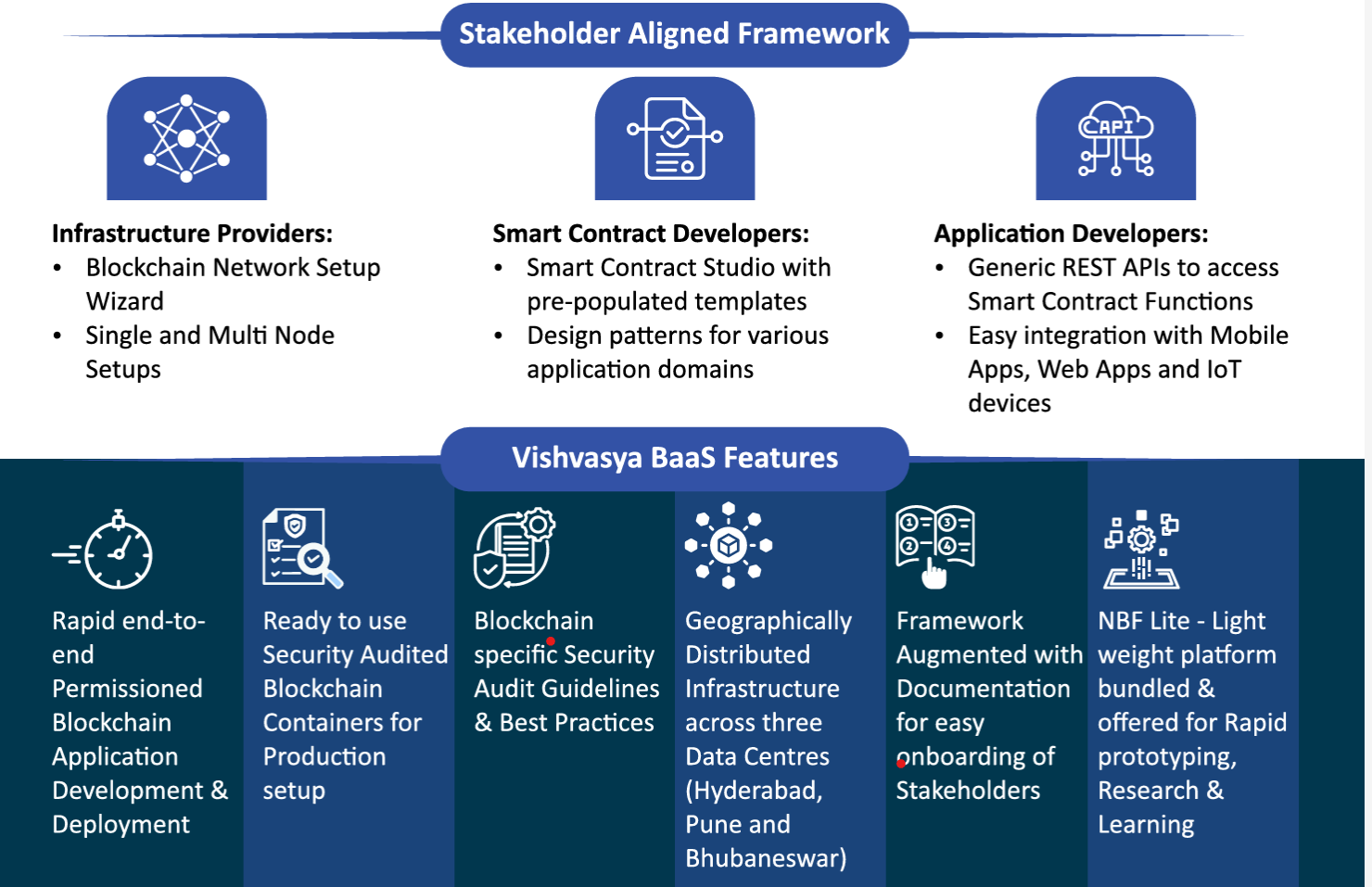
- 08 Sep 2024
The Government of India has recently introduced several significant initiatives to advance blockchain technology and its applications.
1. Vishvasya-Blockchain Technology Stack
- Purpose: The Vishvasya-Blockchain Technology Stack is designed to offer Blockchain-as-a-Service (BaaS) with a geographically distributed infrastructure. This stack supports various permissioned blockchain-based applications, enhancing the security and efficiency of digital services.
2. NBFLite
- Description: NBFLite is a lightweight blockchain platform intended as a sandbox for startups and academic institutions. It allows for rapid prototyping, research, and capacity building, fostering innovation in blockchain applications.
3. Praamaanik
- Purpose: Praamaanik is a blockchain-enabled solution for verifying the origin of mobile apps. This ensures that users can trust the source of their applications, contributing to enhanced digital security.
4. National Blockchain Portal
- Function: The National Blockchain Portal serves as a central hub for accessing blockchain technologies and services developed under the National Blockchain Framework (NBF).
5. National Blockchain Framework (NBF)
- Overview: The NBF is designed to promote secure, transparent, and trusted digital service delivery. It includes:
- Distributed Infrastructure: Hosted across NIC Data Centers in Bhubaneswar, Pune, and Hyderabad.
- Core Framework Functionality: Provides the backbone for various blockchain applications.
- Smart Contracts & API Gateway: Facilitates interactions with blockchain-based systems.
- Security, Privacy & Interoperability: Ensures robust security and privacy while supporting integration with other systems.
- Applications Development: Supports the creation and deployment of blockchain applications.
- Goals: The NBF aims to address challenges such as the need for skilled manpower, vendor lock-in, and issues related to security, interoperability, and performance.
6. Strategic Objectives
- Digital Trust and Service Delivery: The framework is part of the government's effort to create trusted digital platforms and improve service delivery to citizens.
- Global Leadership: The initiative seeks to position India as a global leader in blockchain technology, driving economic growth, social development, and digital empowerment.
- Governance Transformation: Blockchain technology is envisioned to enhance transparency, efficiency, and accountability in public services.
7. Collaborative Efforts
- Development: The technologies have been developed through the collaborative efforts of organizations including C-DAC, NIC, IDRBT Hyderabad, IIT Hyderabad, IIIT Hyderabad, and SETS Chennai, with support from MeitY.
- Research and Patents: The NBF project has already resulted in several patents and research publications, reflecting its innovative and research-driven approach.
8. Future Directions
- Scaling Applications: There is an emphasis on scaling blockchain applications across various states and departments.
- Exploring New Innovations: Efforts will continue to onboard new applications and innovative components on the NBF stack.
Health Ministry approves new treatment regimen for multidrug-resistant TB
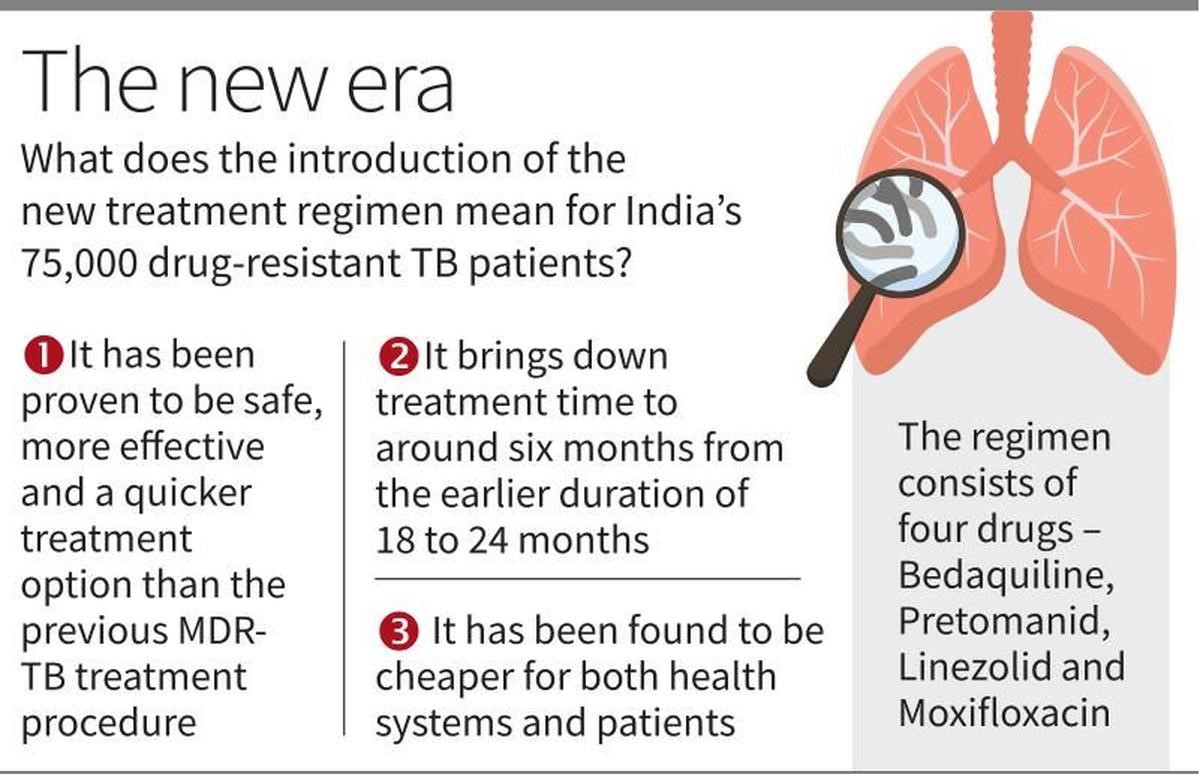
- 08 Sep 2024
The recent approval of the BPaLM regimen by India's Union Health Ministry marks a significant advancement in the fight against multidrug-resistant tuberculosis (MDR-TB). This new treatment combines four drugs—Bedaquiline, Pretomanid, Linezolid, and Moxifloxacin—and offers several benefits over traditional treatments.
Key Points:
- Enhanced Effectiveness: The BPaLM regimen has demonstrated a higher efficacy in treating MDR-TB compared to previous methods.
- Shorter Treatment Duration: Unlike traditional treatments, which can take up to 20 months and often come with severe side effects, the BPaLM regimen shortens the treatment period to just six months.
- Improved Safety: The new regimen is noted for its safety profile, potentially reducing the risk of adverse effects compared to older treatments.
- Cost Savings: By shortening the treatment duration and improving outcomes, the BPaLM regimen is expected to lower overall treatment costs.
- Integration into National TB Elimination Programme: This regimen will be incorporated into India’s National TB Elimination Programme, aligning with the country’s ambitious goal to eliminate TB by 2025, which is five years ahead of the global target.
- Infrastructure and Testing Facilities: India boasts a comprehensive TB laboratory network, including 7,767 rapid molecular testing facilities and 87 culture and drug susceptibility testing laboratories, which will support the implementation of the new regimen.
This development represents a significant step forward in TB care and aligns with broader global efforts to combat drug-resistant TB more effectively.
Agnibaan - SOrTeD: World’s First 3D-printed Rocket Engine
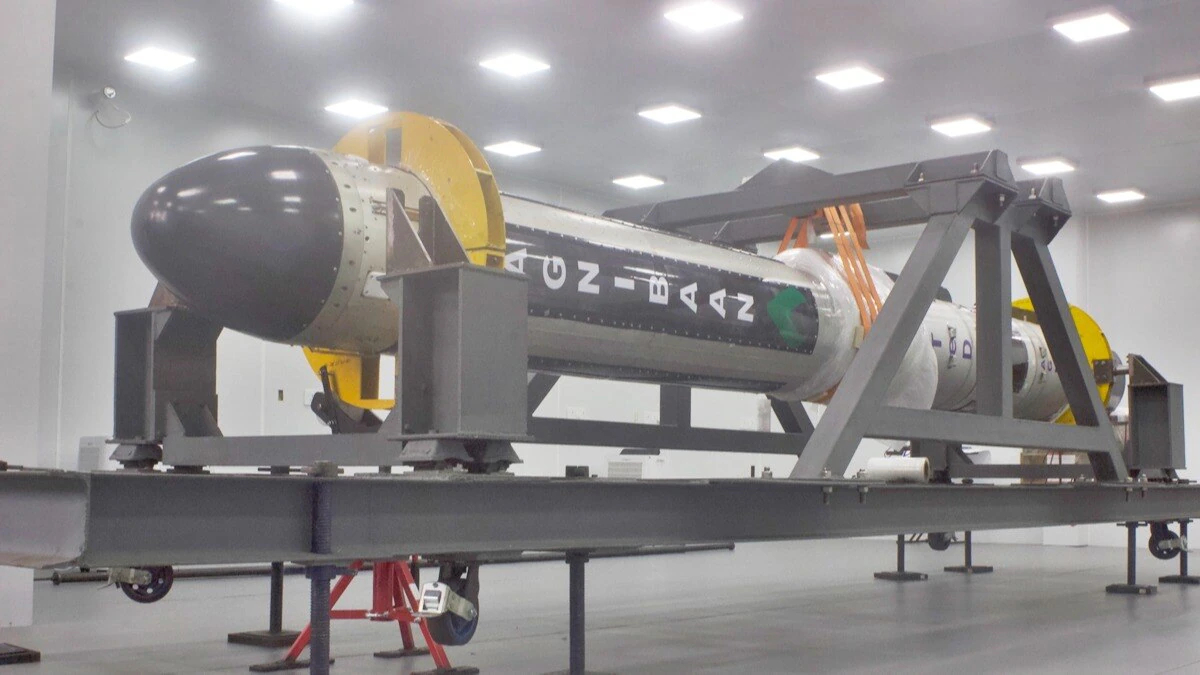
- 31 May 2024
Why is it in the News?
Indian space startup Agnikul Cosmos on Thursday successfully launched its first sub-orbital test vehicle powered by the world’s first single-piece 3D-printed rocket engine, after calling off its launch at least four times previously.
What is Agnibaan - SOrTeD?
- Agnibaan SOrTeD is a sub-orbital technological demonstrator of the Agnibaan launch vehicle, manufactured by Indian space startup Agnikul Cosmos.
- A sub-orbital launch reaches outer space but does not complete an orbit around Earth, intersecting the Earth's atmosphere or surface without becoming an artificial satellite or reaching escape velocity.
- This marks Agnikul’s fifth launch attempt since March 22. With this launch, AgniKul became the second private company to achieve a rocket launch in India, following Skyroot's successful flight in 2022.
Features:
- It is a customizable, two-stage launch vehicle capable of carrying up to 300 kg into an orbit approximately 700 km above Earth.
- Semi-Cryogenic Engine: Utilizes a combination of liquid and gaseous propellants, operating at temperatures higher than cryogenic engines but lower than traditional liquid rocket engines.
- Uses refined kerosene, which is lighter and can be stored at normal temperatures, allowing more propellant to be carried. When combined with liquid oxygen, kerosene provides higher thrust.
- The test flight aims to demonstrate in-house, homegrown technologies, gather crucial flight data, and ensure the optimal functioning of systems for AgniKul's orbital launch vehicle, Agnibaan.
- The rocket is designed for accessing both low and high-inclination orbits and is completely mobile, enabling launches from more than 10 ports.
Agnibaan Acheivments:
- World’s First 3D-Printed Engine: Agnibaan is the first rocket to use a 3D-printed engine.
- First Semi-Cryogenic Engine-Powered Rocket Launch: Pioneering the use of semi-cryogenic engines in rocket launches.
- India’s First Private Launchpad Rocket Launch: The first Indian rocket launch conducted from a private launchpad.
- Unique Engine Configuration: Powered by the only engine in India that uses both gas and liquid fuel (liquid oxygen/kerosene).
Significance:
- Typically, rocket engine parts are manufactured separately and assembled later.
- The 3D-printed manufacturing process is expected to lower launch costs and reduce vehicle assembly time, offering affordable launch services for small satellites.
About 3D Printing:
- 3D printing, also known as additive manufacturing, creates three-dimensional objects from digital models by adding material layer by layer.
- This process, which uses materials like plastic, composites, or bio-materials, allows for efficient and customized production, contrasting with traditional subtractive manufacturing methods.
Notable Examples of 3D Printing:
- Industry Applications: 3D printing is widely used in industries such as healthcare, automotive, and aerospace.
- Aerospace: In May, Relativity Space launched a test rocket made entirely from 3D-printed parts, standing 100 feet tall and 7.5 feet wide.
- However, the rocket experienced a failure shortly after takeoff.
- Healthcare: During the peak of the COVID-19 pandemic in 2020, 3D printers were utilized to produce essential medical equipment, including swabs, face shields, masks, and parts for ventilators.
Cryonics

- 31 May 2024
Why is it in the News?
An Australian cryonics company, Southern Cryonics, sparked a widespread debate after successfully freezing their first client, known as ‘Patient One’.
What is Cryonics?
- Cryonics is the practice of preserving human bodies in extremely cold or cryogenic temperatures (−196°C) with the hope of reviving them sometime in the future.
- Cryonics procedures can begin only after the "patients" are clinically and legally dead.
- When a dead body is cryonically preserved, it is packed with ice and injected with anticoagulants, a treatment to stop blood from clotting.
- The body is then transported to one of three cryonic centres in the world.
- There, in a process known as vitrification, the body is drained of its blood, which is then replaced with chemicals and anti-freeze.
- The body is placed in a sleeping bag and housed in a tank of liquid nitrogen at -196 degrees Celsius.
- The premise of cryonics is based on a possibility rather than a probability of success.
- There is no scientific evidence to suggest that it is possible to revive a person back to a living state.
- Cryobiologists hope that with future technology, including nanotechnology, they will be able to repair cells and tissues that are damaged during the freezing process.
Is cryonics ethical?
- There are some arguments in favour of cryonics, the simplest of which is one of free will and choice.
- As long as people are informed of the very small chance of success of future re-animation, and they are not being coerced, then their choice is an expression of their autonomy about how they wish to direct the disposal of their bodies and resources after death.
- In this light, choosing cryonics can be seen as no different to choosing cremation or burial, albeit a much more expensive option.
- However, this case raises several other ethical and problematic concerns.
- There is the issue of potentially exploiting vulnerable people.
- Some might argue vulnerable people are trading hype for hope.
- The cryonic process might work, but imperfectly. During the process of re-animation, there may be some brain damage.
- That would mean rather than waking up, one might be unconscious or trapped in some disordered, uncontrollable painful stream of consciousness.
It might be heaven but it might also be hell. The key issue is that people must be made aware of the risks as well as the benefits, and are not exploited.
AMRUT scheme
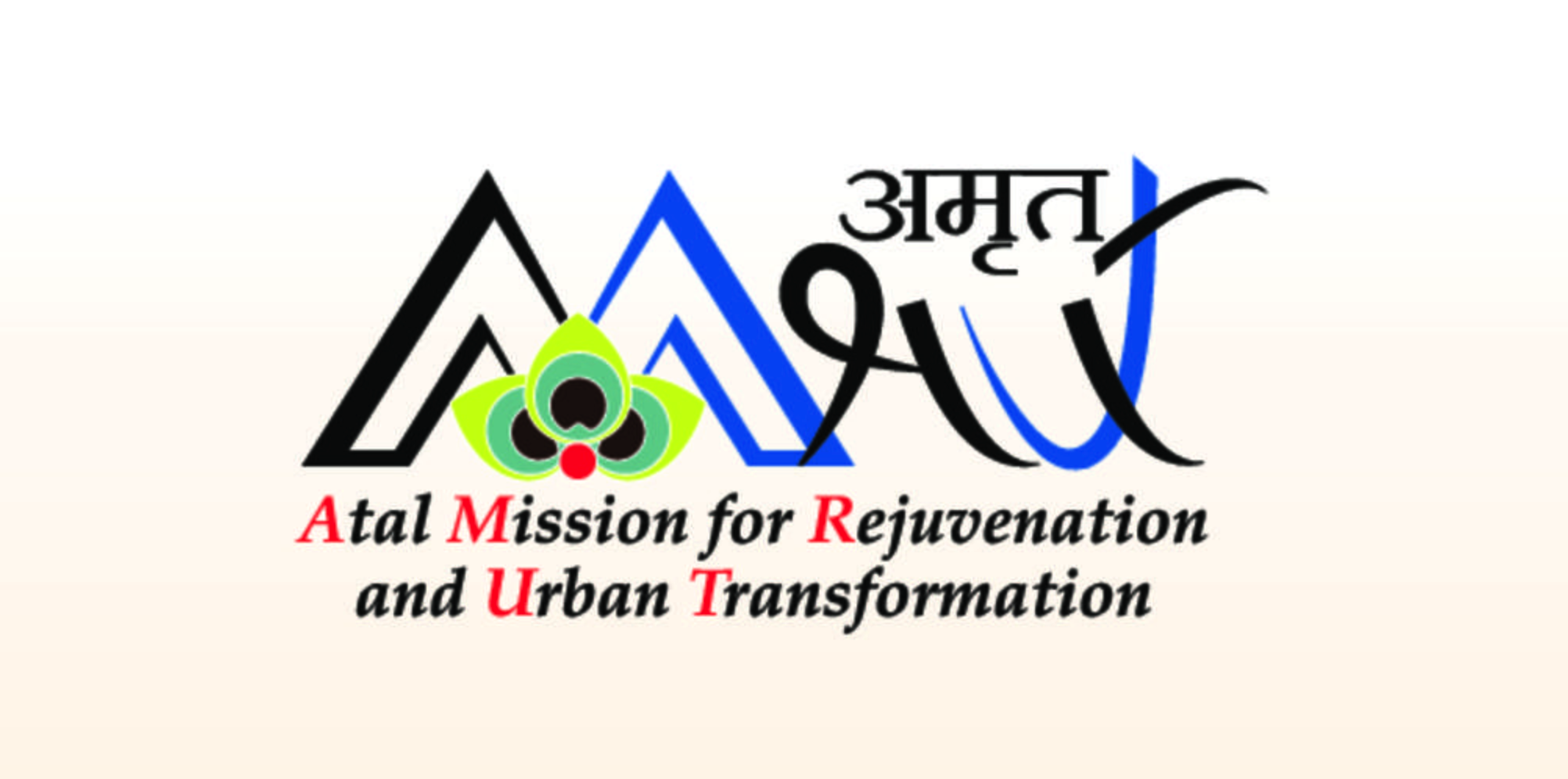
- 30 May 2024
Why is it in the News?
Around 36% of India’s population is living in cities and by 2047 it will be more than 50%. The World Bank estimates that around $840 billion is required to fund the bare minimum urban infrastructure over the next 15 years.
About Atal Mission for Rejuvenation and Urban Transformation (AMRUT):
- AMRUT was launched to enhance the quality of life by providing basic civic amenities, especially benefiting the poor and disadvantaged.
- The mission focuses on infrastructure development to deliver better services to citizens.
- AMRUT covers 500 cities, including all cities and towns with a population of over one lakh that have notified Municipalities.
About AMRUT 2.0:
- AMRUT 2.0 will promote circular economy of water through development of City Water Balance Plan (CWBP) for each city focusing on recycle/reuse of treated sewage, rejuvenation of water bodies and water conservation.
- It will help cities to identify scope for projects focusing on universal coverage of functional water tap connections, water source conservation, rejuvenation of water bodies and wells, recycle/reuse of treated used water, and rainwater harvesting.
- Based on the projects identified in CWBP, Mission envisages to make cities ‘water secure’ through circular economy of water.
The target in the second phase of AMRUT is to:
-
- Improve sewage and septic management
- Make cities water-safe
- Ensure no sewage drains into rivers
- AMRUT 2.0 focuses on enhancing sewerage and septic management to make all Indian cities water secure.
Aim:
- Achieve 100% coverage of water supply to all households in around 4,700 urban local bodies by providing about 2.68 crore tap connections.
- Achieve 100% coverage of sewerage and septage in 500 AMRUT cities by providing around 2.64 crore sewer or septage connections.
Principles and Mechanism:
- Adopt principles of the circular economy to promote conservation and rejuvenation of surface and groundwater bodies.
- Promote data-led governance in water management and leverage the latest global technologies and skills through a Technology Sub-Mission.
- Conduct 'Pey Jal Survekshan' to encourage competition among cities for better water management.
Coverage:
- Extend coverage from 500 cities in the first phase to 4,700 cities and towns.
- Benefit more than 10.5 crore people in urban areas.
Analysis of the AMRUT Scheme:
Performance of the Scheme:
- As of May 2024, the AMRUT dashboard reports that ?83,357 crore has been disbursed. This funding has facilitated:
- 58,66,237 tap connections
- 37,49,467 sewerage connections
- Development of 2,411 parks
- Replacement of 62,78,571 LED lights
Criticism of the Sheme:
Despite these achievements, significant issues persist:
- Approximately 2,00,000 people die annually due to inadequate water, sanitation, and hygiene.
- In 2016, India's disease burden from unsafe water and sanitation was 40 times higher per person than China's, with minimal improvement since then.
- Large volumes of untreated wastewater increase disease vulnerability.
- Around 21 major cities are expected to run out of groundwater. A NITI Aayog report predicts that 40% of India's population will lack access to drinking water by 2030.
- Nearly 31% of urban households lack piped water, and 67.3% are not connected to a piped sewerage system.
- The average urban water supply is 69.25 litres per person per day, far below the required 135 litres.
- Air quality in AMRUT cities and other urban areas continues to worsen.
- While the National Clean Air Programme was launched in 2019 to address air quality, AMRUT 2.0 focuses primarily on water and sewerage issues.
Challenges:
The AMRUT scheme has faced several fundamental challenges:
- Project-Oriented Approach: The scheme adopted a project-oriented rather than a holistic approach.
- Lack of City Participation: It lacked significant involvement from elected city governments, being driven instead by bureaucrats, parastatals, and private companies.
- Governance Issues: Governance was dominated by non-elected officials, violating the 74th constitutional amendment.
- The apex committee was led by the MOHUA secretary, and state committees were headed by chief secretaries, excluding people's representatives.
- Private Nexus: The scheme favored a private nexus of consultants and professionals, sidelining local elected officials.
- Water Management: Effective water management in cities requires consideration of climate, rainfall patterns, and existing infrastructure, which the scheme did not adequately address.
- Inefficient Sewage Treatment: Sewage treatment plants were inefficiently designed, with faecal matter traveling longer distances than the average worker's commute.
- Urban Planning: Driven by private players and real estate developers, urban planning often led to the disappearance of water bodies, disrupted stormwater flows, and a lack of proper stormwater drainage systems.
Way Forward:
To improve the AMRUT scheme:
- Nature-Based Solutions: Implement nature-based solutions.
- Comprehensive Methodology: Adopt a comprehensive methodology that integrates all aspects of urban development.
- People-Centric Approach: Focus on a people-centric approach, involving local communities in decision-making.
Empower Local Bodies: Empower local bodies to take a leading role in governance and implementation.
New Light-based Tool to Detect Viral Infections
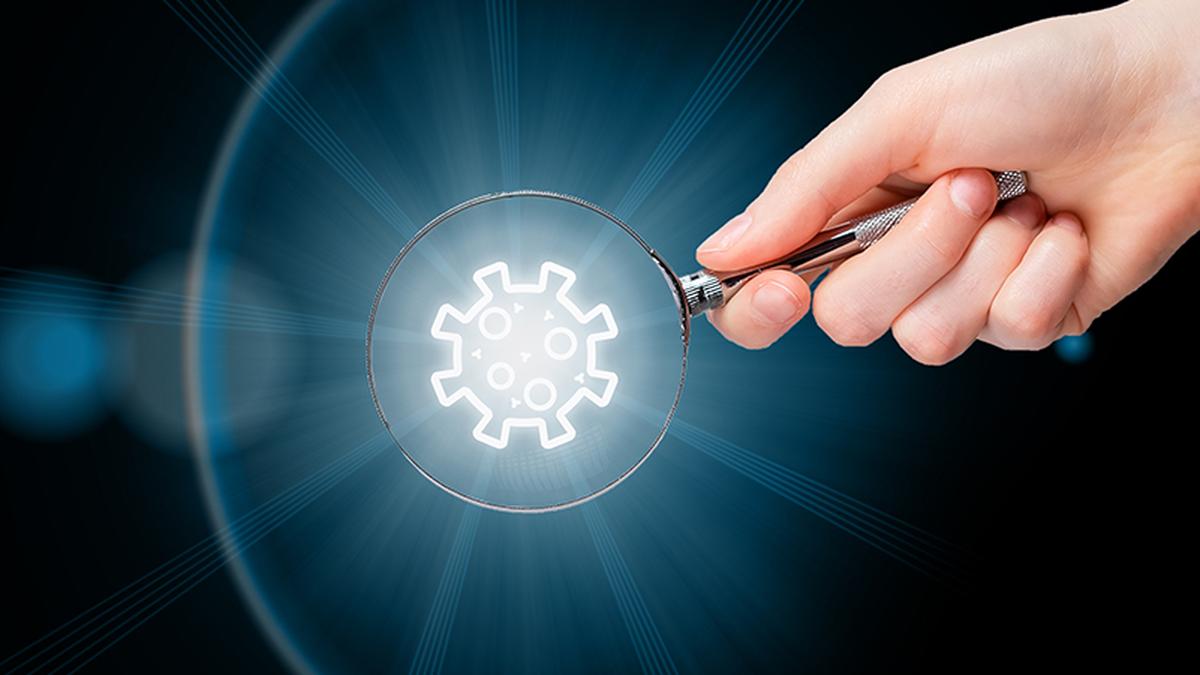
- 30 May 2024
Why is it in the News?
A viral infection can stress cells and change their shapes and sizes. Researchers have built a tool to detect these changes.
About the new Tool:
- A team of researchers has developed an innovative method to detect viral infections in cells using only light and principles of high-school physics.
- The key insight is that viral infections can stress cells, causing changes in their shapes, sizes, and other features.
- As the infection progresses and the body becomes diseased, these changes become more pronounced.
- The researchers have found a way to translate these cellular changes into recognizable patterns that can indicate whether a cell is uninfected, virus-infected, or dead.
- For example, virus-infected cells tend to be elongated and have clearer boundaries compared to uninfected cells.
- By analyzing the patterns of light interacting with cells, this method can non-invasively differentiate between uninfected, virus-infected, and dead cells.
- This approach has the potential to revolutionize viral disease diagnosis and monitoring, providing a simple, cost-effective, and powerful tool for detecting viral infections at the cellular level.
Significance:
- This light-based approach to detecting viral infections offers several significant advantages over the current standard methods:
- Accuracy: The new light-based technique can detect viral infections with equal or even greater accuracy compared to existing standard methods that rely on chemical reagents.
- Cost-effectiveness: The equipment required for this new method costs only around one-tenth of the $3,000 (approximately Rs 2.5 lakh) needed for the standard chemical-based approach, making it a far more affordable option, especially for resource-constrained settings.
- Rapid results: The light-based method can identify virus-infected cells in just about two hours, significantly faster than the 40 hours required by the current standard method.
- This time efficiency can be crucial in situations where rapid detection is essential, such as during a virulent disease outbreak.
- Early detection: By enabling the early detection of viral infections at the cellular level, this new technique could prove invaluable in containing the spread of highly contagious viral diseases, such as a severe influenza outbreak.
What are Viruses?
- Viruses are microscopic organisms capable of infecting various hosts such as humans, plants, animals, bacteria, and fungi.
- Structurally, they consist of genetic material (DNA or RNA) enclosed in a protective shell called a capsid, with some viruses also possessing an envelope.
- Unable to reproduce independently, viruses rely on host cells to replicate by utilizing the cell's machinery.
- Common types include influenza viruses, human herpesviruses, coronaviruses, human papillomaviruses, enteroviruses, flaviviruses, orthopoxviruses, and hepatitis viruses.
- Viruses are responsible for causing illnesses such as flu, the common cold, and COVID-19.
Dag Hammarskjold Medal

- 30 May 2024
Why is it in the News?
An Indian peacekeeper who lost his life serving under the UN flag is among over 60 military, police and civilian peacekeepers to be honoured posthumously with a prestigious medal for their service and supreme sacrifice in the line of duty.
What is Dag Hammarskjold Medal?
- The Dag Hammarskjold medal is a prestigious honour commemorating the ultimate sacrifice made by United Nations peacekeepers.
- Established in 1997, it pays tribute to those who have lost their lives while serving in UN peacekeeping missions under the organization's operational control and authority.
- This posthumous award is presented annually on Peacekeeper's Day at a solemn ceremony held at the United Nations headquarters in New York.
- Each member state that has had military or police personnel perish during peacekeeping duties receives the medal in recognition of their fallen compatriots.
- The medal bears the name of Dag Hammarskjold, the second Secretary-General of the United Nations, whose own life was tragically cut short in 1961 while working to resolve the Congo crisis.
- In naming this honour after him, the UN commemorates both his exceptional leadership and the courageous individuals who have followed in his footsteps by making the ultimate sacrifice for the cause of global peace and security.
India’s Role in Peacekeeping:
- India is currently the second largest contributor of uniformed personnel to UN Peacekeeping after Nepal.
- India is followed by Uganda with 5,764 personnel, and Bangladesh with 5,393.
- These personnel are deployed across 12 UN peacekeeping missions across the world.
- Traditionally, India has always been among the biggest contributors of UN peacekeepers.
- Since 1950, approximately 2, 86,000 Indian soldiers have served in the UN across the globe.
- UN peacekeeping missions are mandated under Article 99 by which the Secretary-General is granted the authority to independently address potential global conflicts or threats.
- Also seen as a very robust diplomatic tool, it is also a way in which the Secretary-General flags the issue to the UN Security Council.
- The functions of UN peacekeeping operations range from maintaining peace and security to escorting humanitarian relief, upholding human rights, supporting the fight against gender-based violence to assist in the restoration of the rule of law and facing the complex crises of today from climate change to pandemic.
Microcephaly
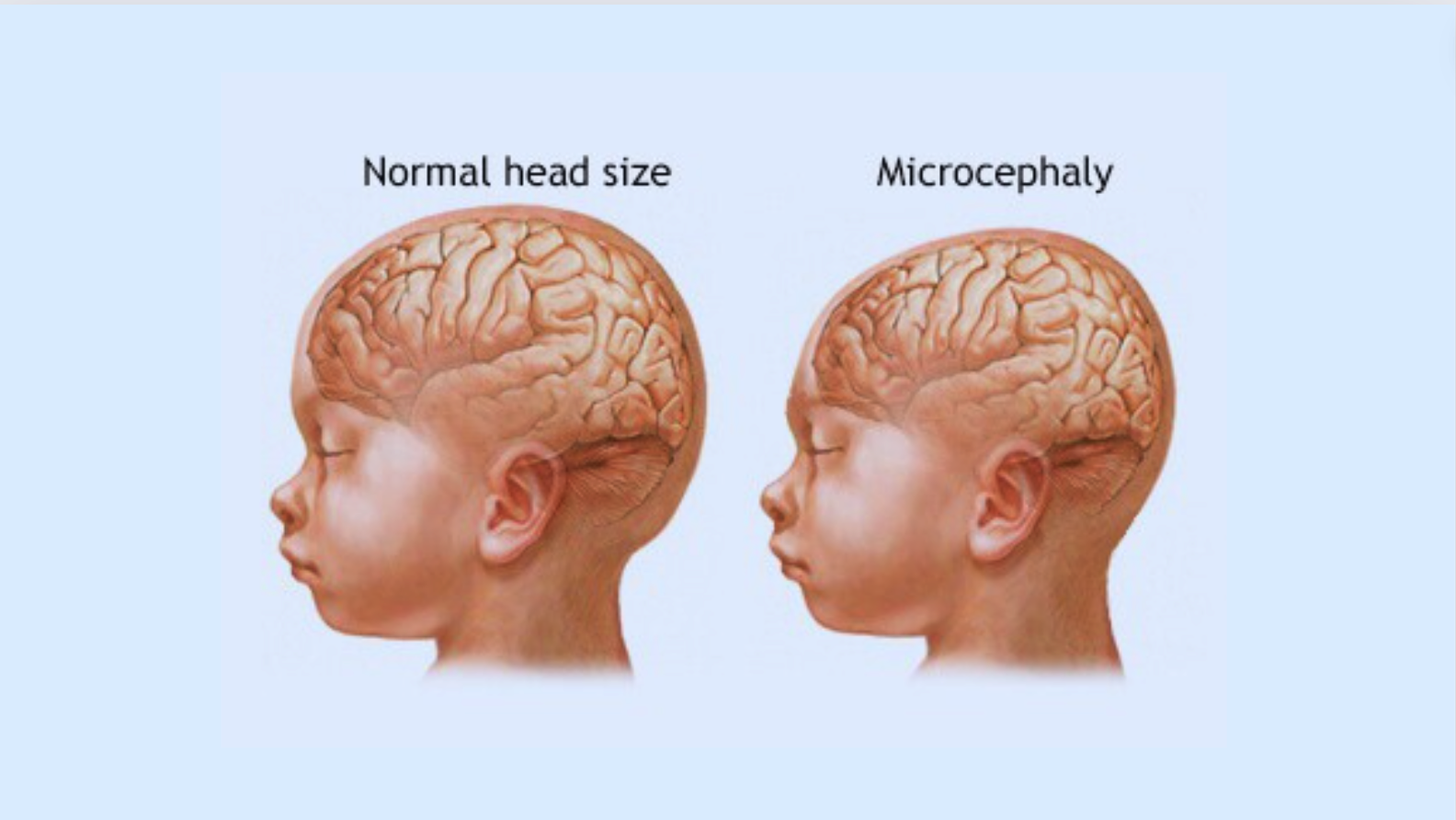
- 30 May 2024
Why is it in the News?
A study recently revealed that a gene called SASS6 and its variants have been implicated in a developmental process that causes microcephaly.
What is Microcephaly?
- Microcephaly is a condition where a baby's brain and head do not develop properly during pregnancy or after birth.
- While rare, it can have profound impacts on a child's cognitive and physical abilities.
- Several factors can disrupt normal brain growth, including infections the mother contracts while pregnant, exposure to toxic substances, genetic disorders, lack of proper nutrition, and injuries before or around the time of birth.
- Infants with microcephaly are born with abnormally small heads compared to others of the same age and sex.
- This small head size indicates an undersized brain.
- As they grow older, many children with microcephaly experience significant developmental delays and disabilities.
- Common symptoms include intellectual disability, impaired motor skills and speech, vision and hearing problems, seizures, and unusual facial features.
- Some cases may show no obvious symptoms at birth, only for challenges to emerge over time.
- Treatment: Unfortunately, there is no cure for microcephaly itself.
- However, early intervention programs, therapies, and educational supports can help manage symptoms and maximize the child's developmental potential within their abilities.
- While microcephaly's causes are varied, maintaining good health before and during pregnancy gives a baby the best chance for proper brain growth.
Preventing prenatal infections, avoiding toxins, getting prenatal screening for disorders, and ensuring adequate nutrition all reduce microcephaly risk.
eMigrate Project
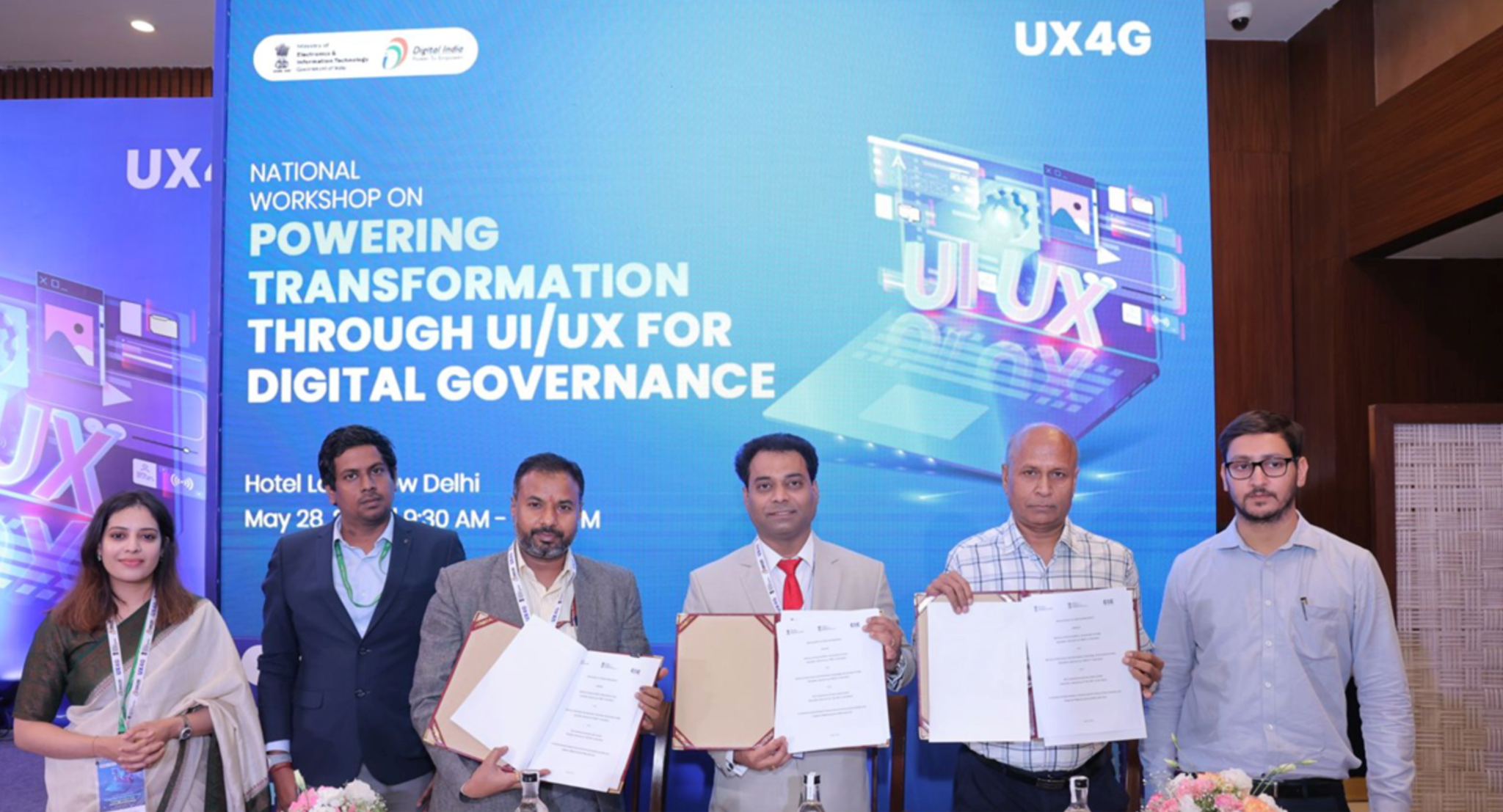
- 30 May 2024
Why is it in the News?
External Affairs Ministry, Ministry of Electronics and Information Technology and Common Services Centers eGovernance Services India Limited have signed a Memorandum of Understanding today to provide the eMigrate services through CSC in the country.
What is the eMigrate Project?
- eMigrate project is undertaken to assist mainly the blue-collar workers going to Emigration Check Required (ECR) countries.
- The project was conceptualized to address issues faced by migrant workers by making the emigration process online seamless and also to bring foreign employers registered recruitment agents and insurance companies on one common platform aimed at promoting safe and legal migration.
- Over the years, the number of Indians going abroad for employment has been increasing as well as the contribution of remittances sent by them has been significant.
- Under this MoU, the eMigrate Portal of MEA would be integrated with CSC’s portal, to provide the following eMigrate services to the citizens through CSCs:
- Facilitate registration of applicants on the eMigrate portal through CSCs.
- Facilitation of uploading and processing of the required documents for the applicants on the eMigrate portal through CSCs.
- Facilitate and support booking for medical and other services required by migrant workers or applicants registered on the eMigrate portal through CSC.
- Creating awareness about eMigrate services amongst citizens across India.
About Common Service Centre (CSC):
- Common Services Centers (CSCs) are an integral part of the Digital India mission.
- The CSCs are frontend service delivery points for the delivery of digital services to the citizens, especially in rural and remote areas across the country.
- This helps in contributing towards the fulfilment of the vision of Digital India and the government’s mandate for a digitally and financially inclusive society.
- Currently, more than 5.50 lakh CSCs are delivering more than 700 digital services to citizens in assisted mode with enhanced ease and convenience.
- Apart from delivering essential government and public utility services, CSCs also deliver a range of social welfare schemes, financial services, educational courses, skill development courses, healthcare, agriculture services, digital literacy, etc.
Landslides in India
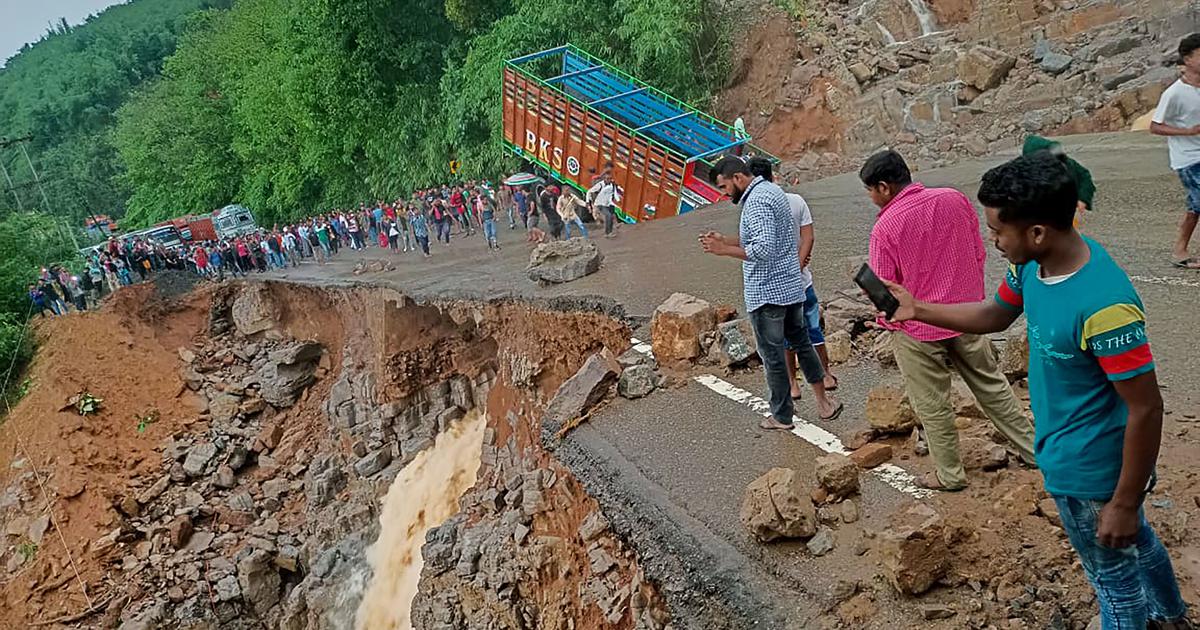
- 29 May 2024
Why is it in the News?
At least 36 people were killed in heavy rains and landslides in four northeastern states on Tuesday under the impact of Cyclone Remal while normal life came to a grinding halt in all the eight states of the region with road and rail links affected.
What are Landslides?
- Landslides in India are one of the major hydro-geological hazards affecting large parts of the landmass of the country.
- It refers to the gravitational movements of a mass of rock, debris, or earth down a slope.
- Landslides are a type of "mass wasting," which denotes any down-slope movement of soil and rock under the direct influence of gravity.
- As per a report from the Geological Survey of India (GSI), 13% of the total land area in India is prone to landslides.
- This covers almost all the hilly regions in the country.
- About 0.18 million square km, or 42% of this vulnerable area is in the Northeastern region, where the terrain is mostly hilly.
What Causes a Landslide in India?
- Deforestation: Removal of trees reduces the binding properties of soil and rocks. This enables the water to seep into the sub-surface, making the topsoil vulnerable.
- For example, the Himalayan region has become more vulnerable to landslides due to the indiscriminate cutting of trees.
- Shifting Cultivation: Shifting cultivation is common in hilly regions and Northeast areas. Every year, residents burn the forests for cultivation purposes.
- However, this deteriorates the quality of topsoil, causing erosion during heavy rainfall. This makes such regions more vulnerable to landslides.
- Heavy Rainfall and Earthquakes: Heavy rainfall and earthquakes often cause landslides.
- For example, heavy rain caused landslides in Talai village of Maharashtra in 2021.
- Mining: Human activities like mining or quarrying remove the vegetation cover and soil gravel. This lowers the groundwater retention capacity. Also, it increases the risk of flooding.
- Therefore, landslides occur due to loose debris or excess floods during an earthquake and heavy rainfall, respectively.
- Urbanisation: Intensive urbanisation and urbanization activities such as establishing commercial housing projects and road construction reduce the vegetation cover which leads to an increasing frequency of landslides.
What Are the Different Types of Landslides?
Landslides in India are divided into four categories:
- Topples: This occurs due to fractures in rocks. It causes tilting for gravitational pull without collapsing.
- Falls: This involves the collapse of rocks or debris from a cliff or slope. It results in the collection of debris at the base of a hill.
- Spread: It occurs in gentle slopes where soft debris or other materials are widely available.
- Slides: It occurs when debris, rocks or soil slide through a slope.
What Are the Impacts of Landslides in India?
- Mud, debris and rocks slide from the slope during landslides.
- This restricts human movement and creates a traffic barrier on highways and railway lines.
- Loss of human lives is one of the severe effects.
- Landslide is the primary factor behind the Joshimath sinking crisis which led to mass evacuation in January 2023.
- It damages houses, roads and buildings.
- This further creates a financial burden for rebuilding infrastructure to rehabilitate the masses.
- The debris sliding down from slopes blocks the river channel fully or partially.
- This makes it difficult for locals to get the water supply.
- Landslides also increase the risk of floods. This is because the debris increases the river sediment.
- As a result, irregular course rivers become frequent, resulting in floods.
What Are the Measures Required to Prevent Landslides?
- An increase in forest cover is a must in community lands to reduce the hazard of landslides.
- People must store the excess water in catchment areas.
- It will reduce the effect of flash floods and also recharge groundwater levels.
- People must restrict the grazing of their animals.
- Reduce the urbanisation activities such as building dams or other commercial projects.
Implementation of public awareness regarding preventive measures during landslides and other hazard management is necessary.
Kaza TFCA (Kavango Zambezi Transfrontier Conservation Area) Summit
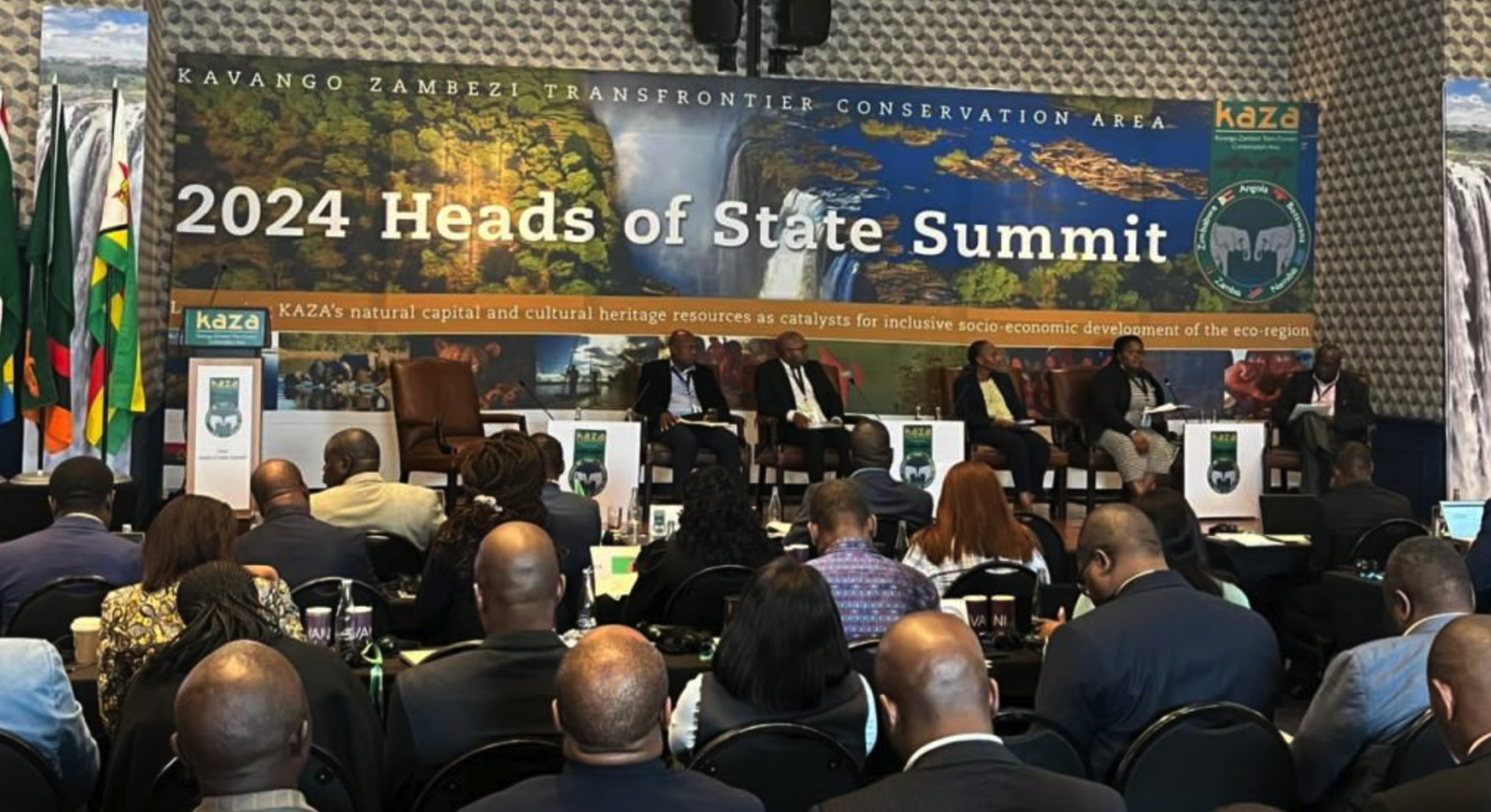
- 29 May 2024
Why is it in the News?
Members states of the world’s largest transnational conservation initiative meet to review progress and strategise the way forward.
About the Kaza TFCA (Kavango Zambezi Transfrontier Conservation Area) Summit:
- The Kaza TFCA (Kavango Zambezi Transfrontier Conservation Area) Summit is a high-level meeting of the heads of state and government representatives from the countries that make up the Kaza TFCA.
- The Kaza TFCA is a conservation area that spans parts of Angola, Botswana, Namibia, Zambia and Zimbabwe.
Some key points about the Kaza TFCA Summit:
- It brings together the political leadership from the five Kaza member countries to discuss issues related to the conservation and sustainable development of the Kaza transfrontier area.
- Topics discussed include wildlife conservation, tourism development, community involvement, and joint management of shared natural resources across international boundaries.
- The Summit aims to strengthen political support, coordination and collaboration among the Kaza partner countries for effective transboundary natural resource management.
- It provides a platform for the member states to review progress made, agree on priorities, and give strategic direction for the Kaza program going forward.
- The Summits are held periodically, with the last one being hosted by Botswana in 2018 in Kasane.
About the Kavango Zambezi Transfrontier Conservation Area:
- The Kavango Zambezi Transfrontier Conservation Area is a 520,000-square-kilometre wetland and spans five southern African countries: Angola, Botswana, Namibia, Zambia and Zimbabwe.
- It is home to a high concentration of wildlife species, including the largest elephant population.
- The KAZA TFCA was formally established on the 18th of August 2011 when the Heads of State of the five governments signed its Treaty in Luanda, Angola, during the SADC Summit for Heads of States.
The KAZA TFCA was established to:
- Conserve the shared natural resources and cultural heritage of this vast area of southern Africa
- Promote and facilitate the development of a complementary and linked network of protected areas that protect wildlife and provide and restore dispersal corridors and migratory routes
- Develop the KAZA TFCA into a world-class tourism destination offering a variety of breathtaking adventures and luxurious relaxation
- Promote the free and easy movement of tourists across borders
- Implement programmes that ensure the sustainable use of natural resources in ways that improve the livelihoods of communities and reduce poverty in the region
- Harmonise conservation legislation and natural resource management of the TFCA
Magellan Mission

- 29 May 2024
Why is it in the News?
After analysing the archived data from the space agency’s Magellan mission, scientists suggest that Venus, the almost Earth-sized planet was volcanically active between 1990 and 1992.
What is the Magellan Mission?
- NASA's Magellan mission to Venus was one of the most successful deep space missions launched from Kennedy Space Center in Florida in the year 1989.
- It was the first spacecraft to image the entire surface of Venus and made several discoveries about the planet.
- Magellan burned up about 10 hours after being commanded to plunge into the Venusian atmosphere.
- Magellan's primary mission was to use a synthetic aperture radar (SAR) to create detailed maps of the surface of Venus.
- The SAR allowed Magellan to penetrate a thick cloud layer which made it challenging to study Venus from Earth.
- By mapping the planet's surface, scientists aimed to investigate the planet's geology and landforms, including its vast plains, steep mountains, and impact craters.
- Magellan was also sent to measure the planet's gravity and magnetic fields.
- This information was considered important to NASA scientists as it would provide more information about the planet's interior structure and composition.
- Because Venus is a planet close to Earth that compares in size and composition, mapping and studying Venus was considered an important mission as it added to understanding the evolution and geology of rocky planets like Earth.
What is the Magellan Spacecraft?
- The Magellan spacecraft was a space probe launched into space on May 4, 1989, by NASA on the Space Shuttle Atlantis.
- NASA named Magellan after the Portuguese explorer Ferdinand Magellan, who was the first documented person to circumnavigate the Earth.
- The Magellan probe aimed to map the planet Venus and collect data about its atmosphere and physical characteristics.
- Venus is the second planet from the sun in the Milky Way solar system and is, along with Mercury, one of two planets that orbit between Earth and the sun.
- Known for being the first spacecraft to map the surface of Venus, Magellan remained in Venus' orbit for four years before being burned up in its atmosphere in October 1994.
What does the study reveal?
- The study identified a 2.2 square kilometre volcanic vent associated with Maat Mons, the second-highest volcano on Venus, located in the Atla Regio near the planet's equator.
- The vent showed signs of drained lava, and the radar images indicated that it had doubled in size over eight months, with the lava lake seeming to have reached the rim. These changes suggested that the vent had been actively erupting and spewing lava.
This discovery provides new insights into the geology and activity of Venus and highlights the importance of studying the planet's surface features to better understand its history and evolution.
Vivekananda Rock Memorial
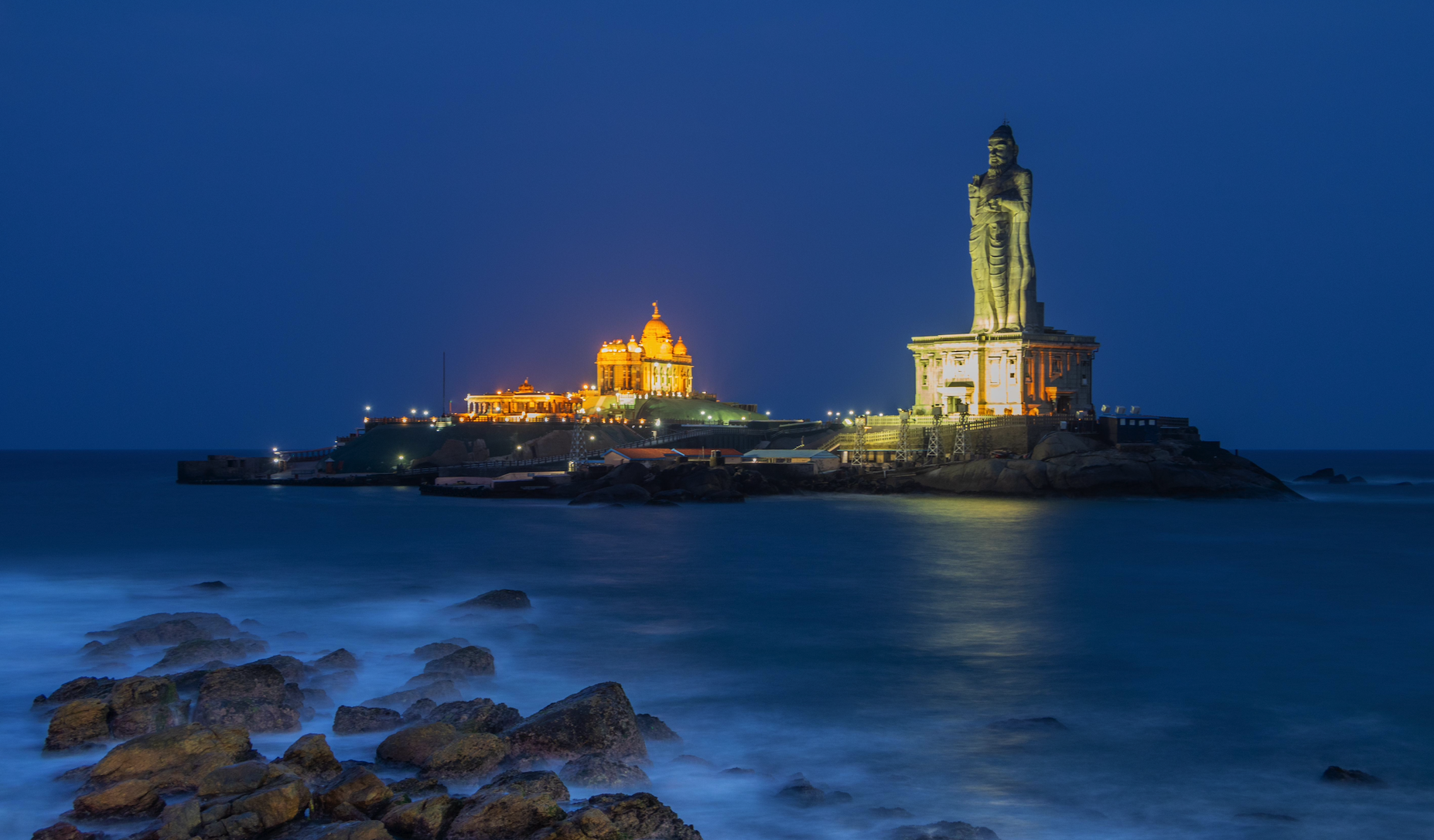
- 29 May 2024
Why is it in the News?
Prime Minister Narendra Modi will be visiting the Vivekananda Rock Memorial in Kanyakumari, to meditate between May 30 to June 1, to mark the culmination of the 2024 Lok Sabha polls.
About the Vivekananda Rock Memorial:
- The Vivekananda Rock Memorial is a monument and a popular tourist destination located approximately 500 metres off the mainland of Vavathurai, Kanyakumari in the state of Tamil Nadu.
- Situated on a big rock, it is surrounded by three water bodies – the Arabian Sea, the Bay of Bengal, and the Indian Ocean.
- Vivekananda is said to have arrived here after wandering across the country.
- It is believed that the monk and the philosopher meditated on the rock and attained a vision for a developed India.
- The memorial, designed by renowned architect Eknath Ranade and completed in 1970, is located at the southernmost point of India in Kanyakumari.
- This is where the eastern and western coastlines of India converge.
- The memorial features two primary structures:
- The Vivekananda Mandapam, which houses an impressive bronze statue of the revered Swami Vivekananda, and
- The Shripada Mandapam contains footprints believed to belong to Goddess Kanyakumari.
- This site holds profound cultural and spiritual significance, with legendary tales of Goddess Kanyakumari praying to Lord Shiva on this rock.
- This memorial is right next to a huge monolithic statue of Tamil poet and philosopher Thiruvalluvar which was created by the Indian sculptor V Ganapati Sthapati.
About Swami Vivekananda:
- Swami Vivekananda (1863–1902), born Narendranath Datta, was a renowned Hindu monk and spiritual leader.
- A foremost disciple of Sri Ramakrishna Paramhamsa, he was recognized as a meditation expert by his guru.
- Vivekananda sought to integrate Indian spirituality with Western material progress, viewing them as complementary.
- He emphasized self-purification through helping others and advocated for selfless service and societal betterment.
- His teachings covered the four yogas, the harmony of religions, the divinity of the soul, and serving humanity as God.
- He gained international recognition by representing Hinduism at the 1893 World's Parliament of Religions in Chicago.
Upon returning to India, he founded the Ramakrishna Order at Belur in 1897.
Golden Rice

- 29 May 2024
Why is it in the News?
A court in the Philippines recently revoked biosafety permits for commercial propagation of genetically modified golden rice and Bt eggplant.
What is Golden Rice?
- In the late 1990s, German plant scientists Ingo Potrykus and Peter Beyer developed Golden Rice to combat vitamin A deficiency, a leading cause of infant blindness and increased mortality from infectious diseases like measles.
- Golden Rice is a type of rice that produces beta-carotene, giving it a golden colour, unlike white rice, which lacks these nutrients.
- Vitamin A deficiencies are prevalent in countries where rice is a staple food.
- The widespread use of Golden Rice is expected to improve health by reducing rates of preventable blindness and mortality, especially among children and pregnant women.
Golden Rice and Vitamin A Deficiency:
- Potrykus and Beyer added two genes to white rice in 2004, creating Golden Rice, which they donated to impoverished nations as a solution to vitamin A deficiency (VAD).
- Governments approve Golden Rice cultivation only after ensuring it is safe for the environment, humans, and animals.
- Golden Rice can replace the daily intake of white rice without adverse effects, providing a natural source of vitamin A and beta-carotene to combat VAD.
Efficacy of Golden Rice:
- Adequate vitamin A levels in mothers support vision, immune health, and fetal development through the placenta and breastfeeding.
- Vitamin A deficiency is the leading cause of childhood blindness and weakens the body’s ability to fight common diseases, leading to high mortality rates among young children and their mothers.
- Natural sources of vitamin A include animal products like milk, butter, cheese, eggs, and liver, while plants do not contain vitamin A directly, they contain beta-carotene, which the body can convert into vitamin A.
- White rice is rich in carbohydrates but lacks beta-carotene, an antioxidant and precursor to vitamin A.
- Golden Rice, containing beta-carotene, can help prevent millions of deaths and alleviate suffering from VAD and micronutrient malnutrition in impoverished regions.
Additionally, expanding the cultivation of genetically modified, bio-fortified crops like Golden Rice could further address vitamin deficiencies in developing countries.
Denotified, Nomadic and Semi-Nomadic Tribes
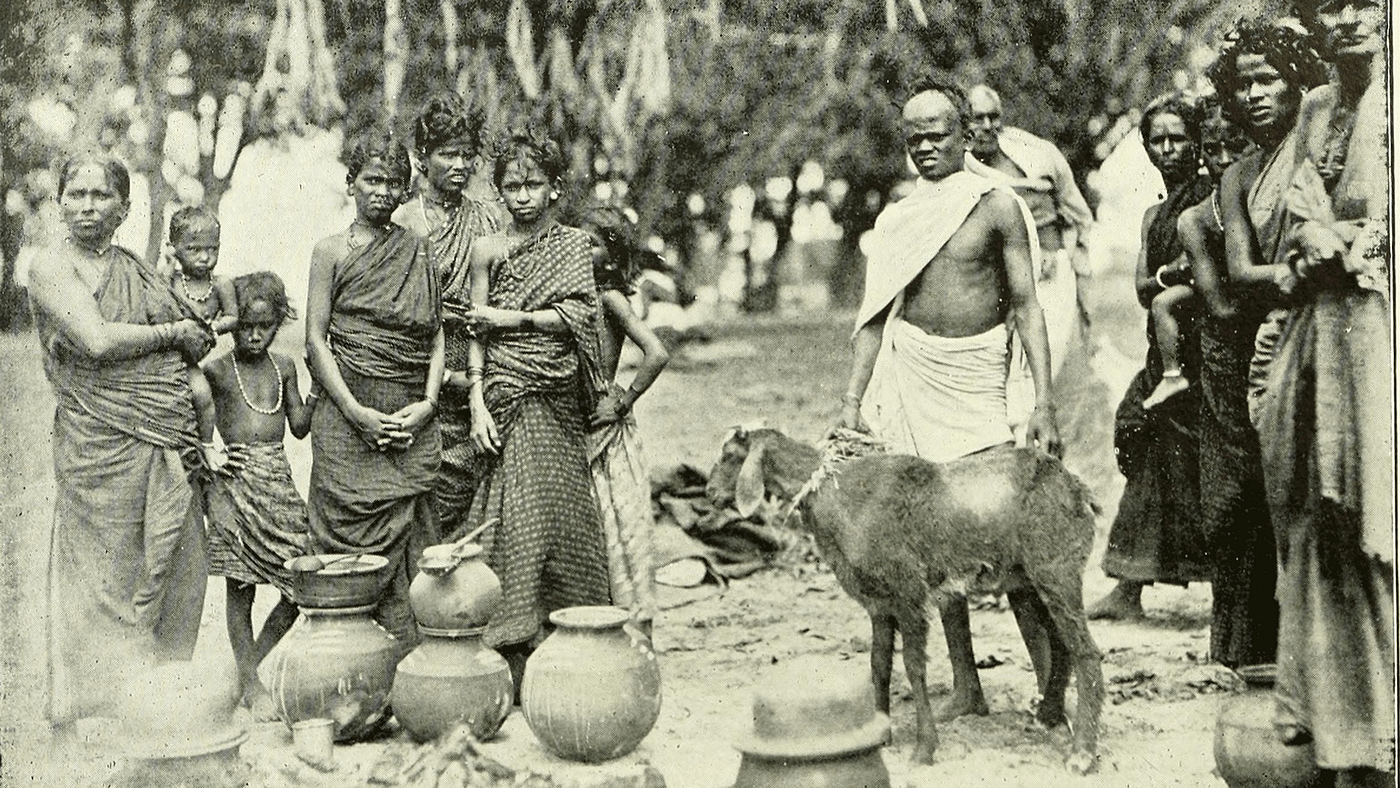
- 28 May 2024
Why is it in the News?
Denotified and Nomadic Tribes, a group of marginalised communities across Andhra Pradesh, have been silently suffering neglect and caste-based discrimination for centuries.
Who are Denotified, Nomadic, and Semi-Nomadic Tribes?
- Denotified, Nomadic and Semi-Nomadic Tribes are among the most vulnerable and deprived communities in India.
- Denotified Tribes (DNTs): These communities were labelled as 'born criminals' under British colonial laws, starting with the Criminal Tribes Act of 1871.
- The Independent Indian Government repealed these Acts in 1952, thereby 'de-notifying' these tribes.
- Nomadic and Semi-Nomadic Tribes: These groups are characterized by their mobility, moving from place to place rather than settling permanently.
- Historically, they have not had access to private land or home ownership.
Social and Historical Context:
- Categorization: Many DNTs are classified within Scheduled Castes (SC), Scheduled Tribes (ST), and Other Backward Classes (OBC), but some remain uncategorized in these groups.
Historical Commissions:
- Criminal Tribes Inquiry Committee (1947): Investigated the status of these tribes in the United Provinces (now Uttar Pradesh).
- Ananthasayanam Ayyangar Committee (1949): Led to the repeal of the Criminal Tribes Act.
- Kaka Kalelkar Commission (1953): The first OBC Commission.
- B.P. Mandal Commission (1980): Made recommendations concerning these communities.
- National Commission to Review the Working of the Constitution (NCRWC, 2002): Highlighted the wrongful stigmatization and exploitation of DNTs, chaired by Justice M.N. Venkatachaliah.
Population and Distribution:
- South Asia: Hosts the largest nomadic population in the world.
- India: Approximately 10% of the population is comprised of Denotified and Nomadic Tribes.
- There are about 150 Denotified Tribes and around 500 different Nomadic Tribes in India.
Challenges Faced by Nomadic Tribes:
- Lack of Basic Infrastructure: Nomadic tribes often lack access to essential facilities such as drinking water, shelter, sanitation, healthcare, and education.
- Stigma and Treatment: Historically labelled as criminals, these communities still face discrimination and harsh treatment from local authorities and police.
- Lack of Social Security: Due to their frequent movement, nomadic tribes do not have permanent settlements, which makes it difficult for them to obtain social security documents like Ration Cards and Aadhaar Cards.
- This exclusion prevents them from accessing government welfare schemes.
- Unclear Caste Categorization: The classification of these tribes varies across states, with some being categorized as Scheduled Castes (SC) and others as Other Backward Classes (OBC).
- Many individuals lack caste certificates, hindering their ability to benefit from government programs.
Developmental Efforts for Nomadic Tribes:
- Dr Ambedkar Pre-Matric and Post-Matric Scholarship for DNTs: Launched in 2014-15, this centrally sponsored scheme supports DNT students not covered under SC, ST, or OBC categories.
- The pre-matric scholarship promotes education among DNT children, especially girls.
- Nanaji Deshmukh Scheme of Construction of Hostels for DNT Boys and Girls: Also launched in 2014-15, this scheme is implemented through state governments, UT administrations, and central universities.
- It provides hostel facilities for DNT students not covered under SC, ST, or OBC categories, enabling them to pursue higher education.
- Scheme for Economic Empowerment of DNTs: Aim to offer free competitive exam coaching, health insurance, housing assistance, and livelihood initiatives.
- Allocates Rs. 200 crores to be spent over five years starting from 2021-22.
The Development and Welfare Board for De-notified, Nomadic, and Semi-Nomadic Communities (DWBDNC) is responsible for its implementation.
Onset of Monsoon
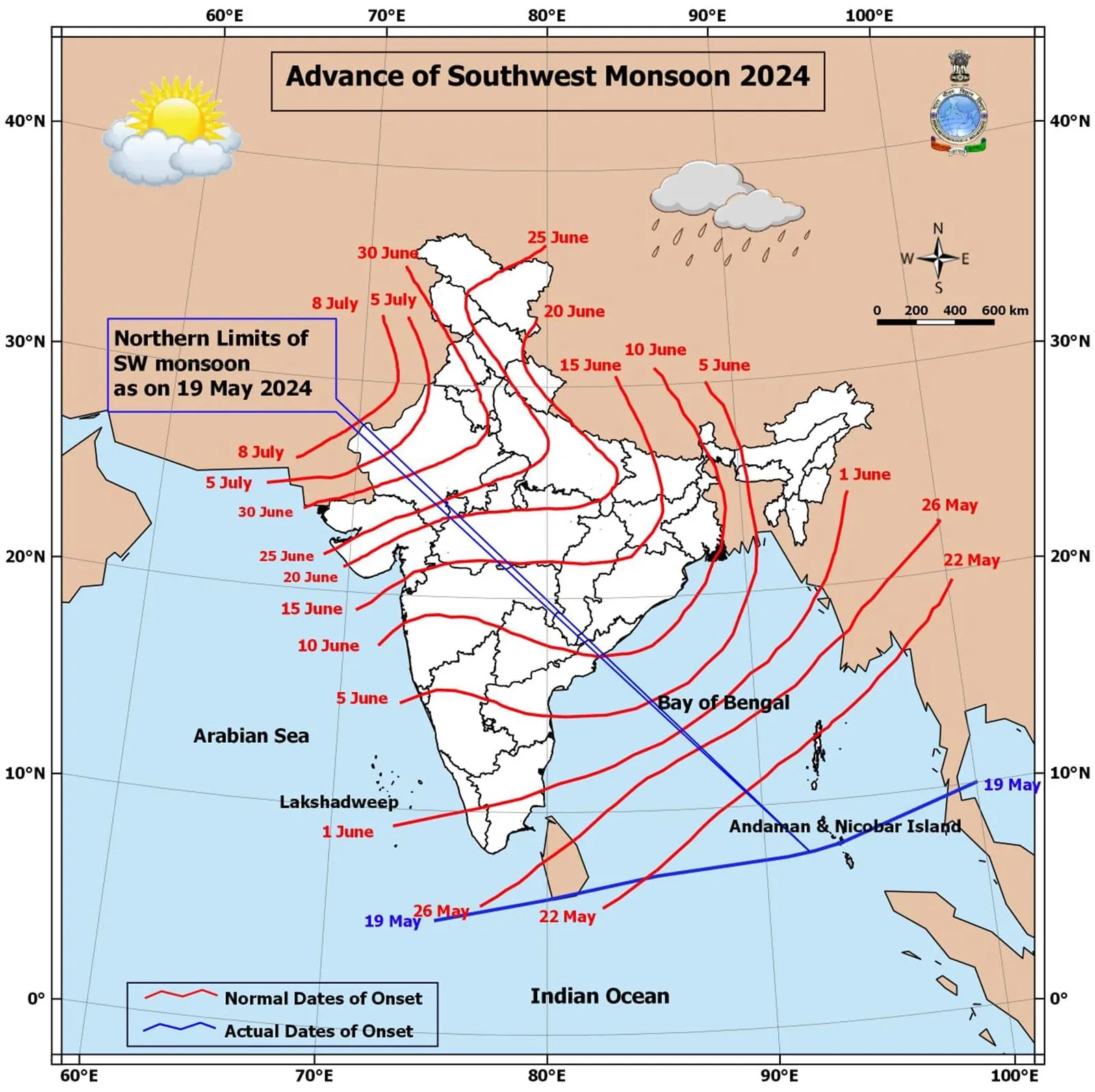
- 28 May 2024
Why is it in the News?
The southwest monsoon is progressing normally, and conditions are suitable for its onset on the Kerala coast in the next five days, the India Meteorological Department (IMD) said on Monday (May 27).
What does the ‘onset of monsoon’ Mean?
- The onset of the monsoon over Kerala marks the beginning of the four-month, June-September southwest monsoon season over India, which brings more than 70% of the country’s annual rainfall.
- The onset of the monsoon is a significant day in India’s economic calendar.
- According to the IMD, the onset of the monsoon marks a crucial transition in the large-scale atmospheric and ocean circulations in the Indo-Pacific region, and the Department announces it only after certain defined and measurable parameters, adopted in 2016, are met.
Onset & Advance of Monsoon:
- Broadly, the IMD checks for the consistency of rainfall over a defined geography, its intensity, and wind speed.
- Rainfall: The IMD declares the onset of the monsoon if at least 60% of 14 designated meteorological stations in Kerala and Lakshadweep record at least 2.5 mm of rain for two consecutive days at any time after May 10. In such a situation, the onset over Kerala is declared on the second day, provided specific wind and temperature criteria are also fulfilled.
- The 14 enlisted stations are Minicoy, Amini, Thiruvananthapuram, Punalur, Kollam, Alappuzha, Kottayam, Kochi, Thrissur, Kozhikode, Thalassery, Kannur, Kasaragod, and Mangaluru.
- Wind field: The depth of westerlies, prevailing winds that blow from the west at midlatitudes — should be up to 600 hectopascals (1 hPa is equal to 1 millibar of pressure) in the area bound by the equator to 10ºN latitude and from longitude 55ºE to 80ºE.
- The zonal wind speed over the area bound by 5-10ºN latitude and 70-80ºE longitude should be of the order of 15-20 knots (28-37 kph) at 925 hPa.
- Heat: According to IMD, the INSAT-derived Outgoing Longwave Radiation (OLR) value (a measure of the energy emitted to space by the Earth’s surface, oceans, and atmosphere) should be below 200 watts per sq m (wm2) in the box confined by 5-10ºN latitude and 70-75ºE latitude.
- Northern Limit of Monsoon (NLM): Southwest monsoon normally sets in over Kerala around 1st June.
- It advances northwards, usually in surges, and covers the entire country around the 15th of July.
- The NLM is the northernmost limit of monsoon up to which it has advanced on any given day.
In general, the Andaman and Nicobar Islands start receiving monsoon rainfall between May 15 and May 20 every year, and it usually starts raining along the Kerala coast in the last week of May.
Mundra Port
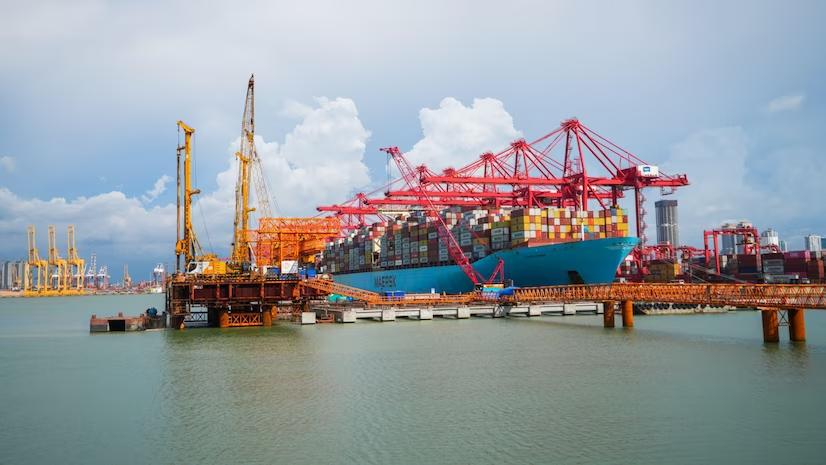
- 28 May 2024
Why is it in the News?
Adani Ports and Special Economic Zone Ltd (APSEZ) on Sunday said its flagship Mundra Port has created yet another record by welcoming the largest container ship to call at an Indian port.
About Mundra Port:
- Mundra Port is the largest private and container port in India.
- It is situated on the northern shores of the Gulf of Kutch, near Mundra in the Kutch district of Gujarat.
- It is a deep-draft, all-weather port and a designated special economic zone (SEZ).
- Mundra Port handles 33% of India's container traffic and is a critical hub for the nation's trade.
Ownership and Operations:
- Adani Ports and Special Economic Zone Limited (APSEZ), India's largest commercial port operator, oversees nearly one-fourth of the country's cargo movement.
Handling Capacity:
- Capacity: The port has a capacity of 260 million metric tons (MMT) and handled over 155 MMT in the fiscal year 2022-23, which represents nearly 11% of India’s maritime cargo.
- Facilities: Equipped with 26 berths and two single-point moorings, Mundra Port can accommodate a diverse range of vessels and cargo types, including containers, dry bulk, break bulk, liquid cargo, and automobiles.
- Coal Terminal: It hosts the country's largest coal import terminal, ensuring rapid cargo processing with minimal turnaround time.
- Connectivity: The port's rail network connects seamlessly with the national rail system, facilitating cargo transportation to any location in India.
What is MSC Anna?
- MSC Anna is the largest container ship ever to dock at an Indian port.
- Size: The vessel measures 399.98 meters in length, approximately the length of four football fields, making it one of the largest container ships globally.
- Capacity: MSC Anna can carry up to 19,200 TEUs (20-foot equivalent units).
With an arrival draft of 16.3 meters, it can only be accommodated at Adani Ports' Mundra Port, as no other port in India has the capability to berth such a deep-draft vessel.
ZIG Currency
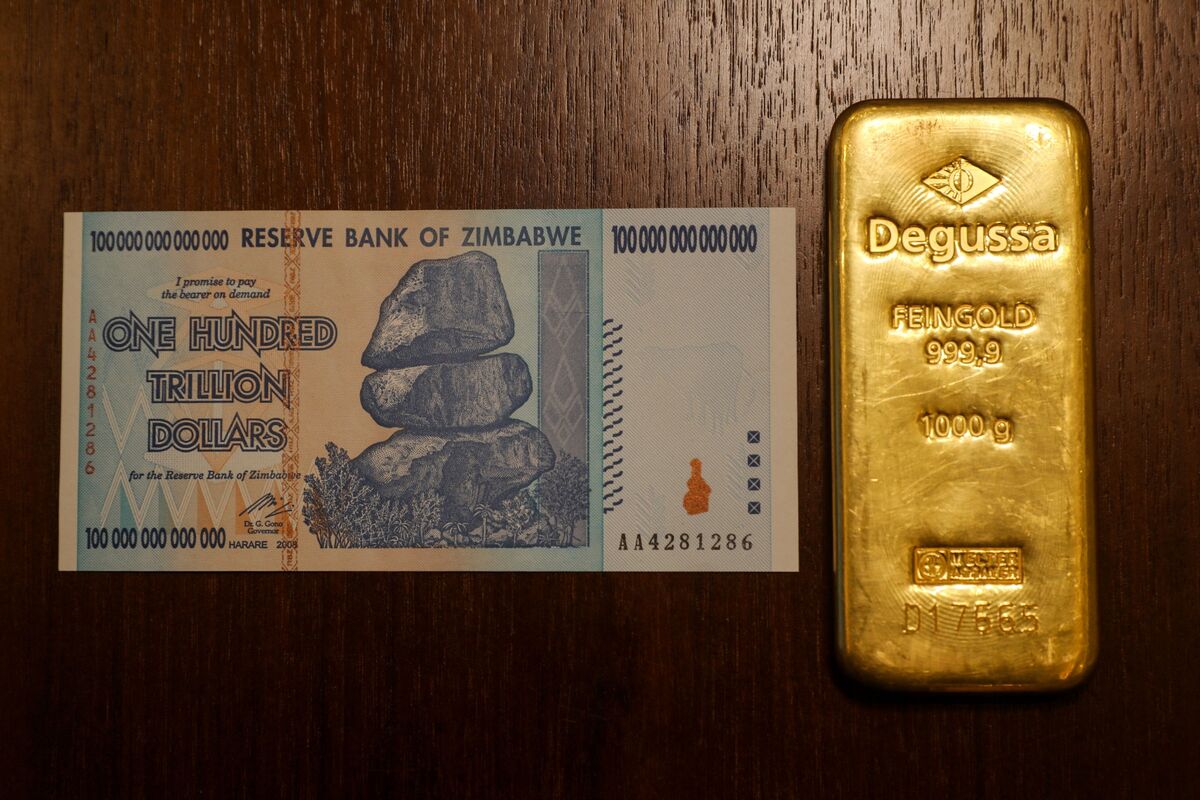
- 28 May 2024
Why is it in the News?
To address its long-standing economic instability, the Reserve Bank of Zimbabwe (RBZ) has launched a new gold-backed currency called the ZiG, short for Zimbabwe Gold, replacing the Zimbabwean dollar on April 5, 2024.
What is a ZiG Currency?
- Zimbabwe Gold, or ZIG, is the world's newest currency that was introduced by Zimbabwe to replace the Zimbabwe dollar in April.
- It is backed by the country's gold reserves and was launched in an effort to reduce currency instability and hyperinflation.
- It is the sixth currency Zimbabwe has used since the 2009 collapse of the Zimbabwe dollar amid hyperinflation of 5 billion per cent.
Features of ZiG currency:
- Gold-Backed: The ZiG is unique as it is backed by gold reserves, ensuring its value is supported by the physical gold held by the government.
- Denominations: ZiG notes and coins are issued in denominations of 1ZiG, 2ZiG, 5ZiG, 10ZiG, 20ZiG, 50ZiG, 100ZiG, and 200ZiG. This gold backing aims to provide stability and prevent currency devaluation.
Reasons for Launching a New Currency:
- High Inflation: Zimbabwe has struggled with extreme inflation, with rates exceeding 500% in recent years.
- Currency Instability: The Zimbabwean dollar, introduced in 1980, lost its value due to hyperinflation. The country's reliance on various foreign currencies, mainly the US dollar, has limited economic control.
- Historical Collapse: The collapse of the Zimbabwean dollar in 2009, with hyperinflation peaking at 5 billion per cent, is one of the worst currency crashes in history.
Economic Control: Converting the previous national currency, the Zimbabwe dollar, into ZiGs is intended to simplify monetary matters and provide certainty and predictability in the financial system.
Eucalyptus Tree
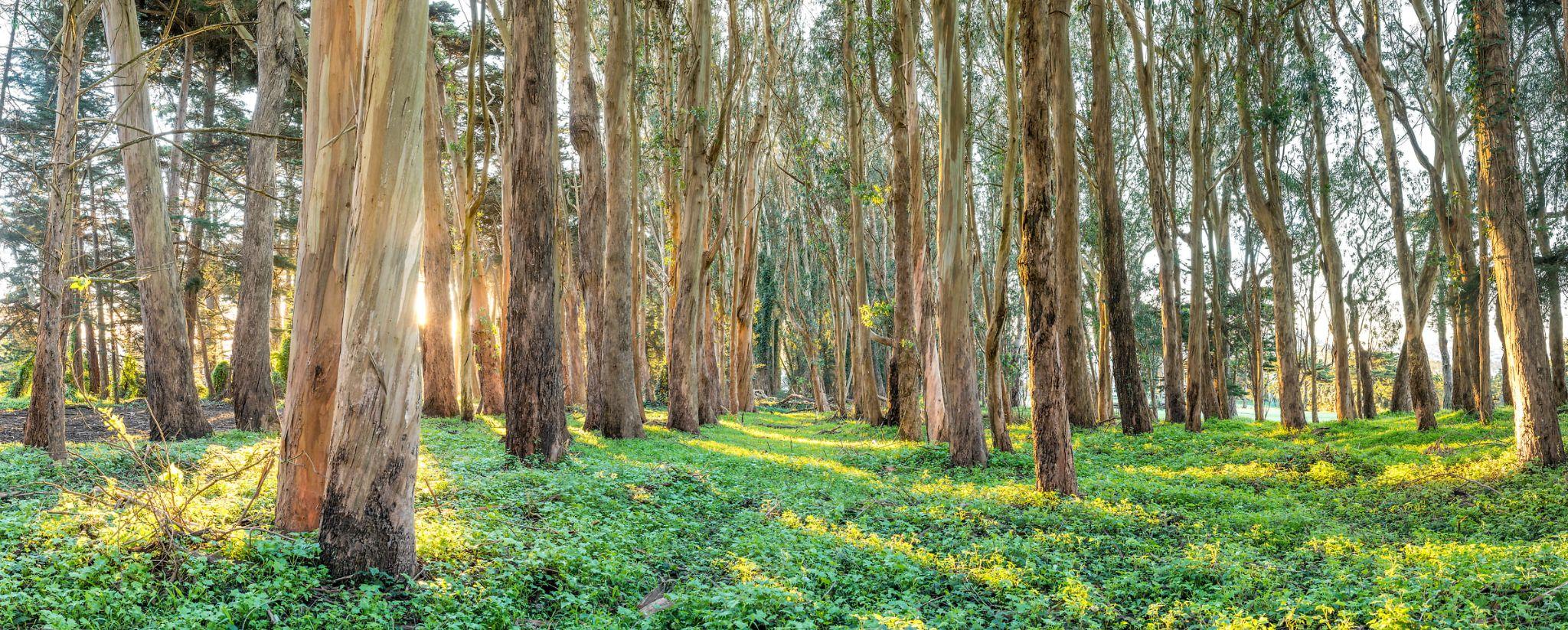
- 28 May 2024
Why is it in the News?
The Kerala government issued an order allowing the Kerala Forest Development Corporation (KFDC) to plant eucalyptus trees for its financial sustenance in 2024-2025.
What is the Eucalyptus Tree?
- Eucalyptus is an evergreen tree, one of the most widely cultivated trees native to Australia.
- In Australia, they are commonly referred to as gum trees or stringybark trees.
- The eucalyptus, which is an invasive species of flora, was planted in large numbers by the British in the areas surrounding Nilgiris.
- Many eucalyptus species are cultivated globally as shade trees and in forestry plantations.
Features:
- Bark: Eucalyptus trees have gum-infused bark.
- Leaves: They feature long stems and circular leaves, which are difficult to digest if eaten whole.
- Flowers: Small flowers grow on eucalyptus trees, available in various colours including white, yellow, and shades of red.
- Capsules: Eucalyptus produces small woody capsules that contain seeds.
Uses of Eucalyptus:
- Medicinal Properties: Eucalyptus is widely valued for its medicinal benefits. Some species' leaves contain oil with a strong aroma, primarily composed of cineole (eucalyptol), along with flavonoids and tannins, which have anti-inflammatory and antioxidant properties.
- Respiratory Relief: Eucalyptus oil is well-known for relieving congestion and easing breathing during colds.
- Pain Relief: The oil is also used as a topical treatment for sore muscles, aching joints, and rheumatism, improving blood circulation when applied.
- Wood: Eucalyptus wood is tough and durable, making it ideal for building furniture and fences.
Eucalyptus Plantations in India:
- Species: The most widely planted eucalypts in India are Eucalyptus tereticornis and Eucalyptus hybrid.
- Regions: It is extensively grown in Tamil Nadu, Andhra Pradesh, Gujarat, Haryana, Mysore, Kerala, and the Nilgiri Hills.
- Growing Conditions: Eucalyptus thrives in deep, fertile, well-drained loamy soil with adequate moisture.
Dangers of Eucalyptus Tree:
- Water: Eucalyptus trees have a terrible reputation as extensive water users and significant contributors to soil depletion.
- While they do need copious quantities of water, their colossal taproot can find moisture even in the most barren areas.
- This voracious appetite helps maintain their incredibly rapid growth.
- Toxicity: Eucalyptus plant foliage is toxic to animals and humans if ingested.
- Exploding: Eucalyptus oil gives off flammable fumes, and these fumes can be ignited by lightning, flying sparks, and cinders, causing the tree to explode.
Fireballs: During brush or forest fires, the eucalyptus species releases great quantities of flammable gas that mix with air to produce fireballs full of sparks and embers exploding out in front of the fire.
WHO Pandemic Treaty
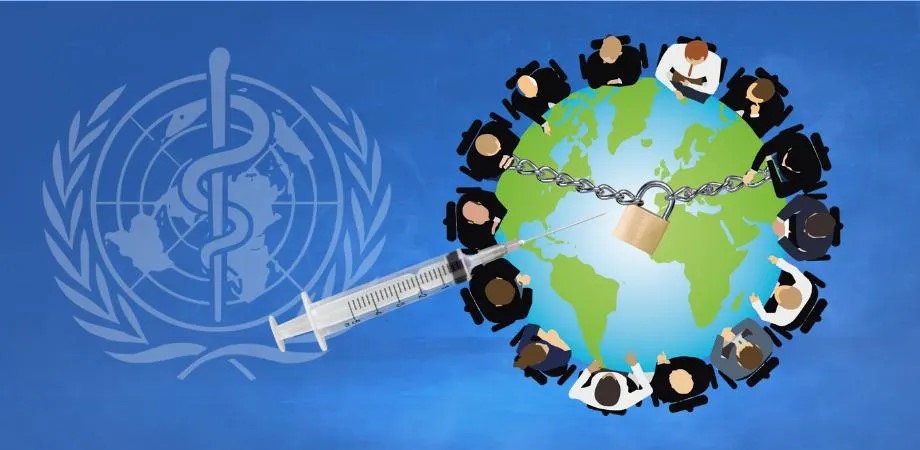
- 27 May 2024
Why is it in the News?
Health officials from the 194 member states of the World Health Organization hope next week to complete more than two years of negotiations on new rules for responding to pandemics when they gather in Geneva.
What is the Pandemic Treaty?
- The "Pandemic Treaty" or "Pandemic Accord" refers to an ongoing process at the World Health Organization (WHO) to negotiate an international agreement or convention on pandemic prevention, preparedness, and response.
- The idea was proposed in late 2020 amid the COVID-19 pandemic to strengthen global coordination and solidarity in addressing future pandemic threats.
- The WHO already has binding rules known as the International Health Regulations (2005) which set out countries’ obligations where public health events have the potential to cross national borders.
- These include advising the WHO immediately of a health emergency and measures on trade and travel.
- Adopted after the 2002/3 SARS outbreak, these regulations are still seen as functional for regional epidemics such as Ebola but inadequate for a global pandemic.
Key points about the proposed Pandemic Treaty/Agreement:
- Objective: To establish a global framework and rules to ensure better cooperation, data sharing, and coordinated response during future pandemics.
- Legal Status: It would be a legally binding international instrument, like a treaty or convention, requiring ratification by WHO member states.
- Core Elements: Likely to include provisions on equitable access to countermeasures, strengthening health systems, information sharing, One Health approach (human-animal-environment interface), and funding mechanisms.
- Negotiation Process: In December 2021, the World Health Assembly established an intergovernmental negotiating body to draft and negotiate the instrument through a member-state-led process.
- The goal is to learn from COVID-19 experiences and create a binding global framework that facilitates a more coherent, better-coordinated international response to potential future pandemic threats.
How will the Global Health Rules change?
- The updates to the International Health Regulations (IHR) include:
- A new alert system to provide different risk assessments for future outbreaks, addressing criticisms that the current system delayed the COVID-19 response.
- Introducing an intermediary alert stage called “early action alert,” in addition to the existing Public Health Emergency of International Concern (PHEIC).
- Considering a “pandemic emergency” designation for the most severe health threats, filling a gap in the current system which does not use the term "pandemic."
- Strengthening state obligations to inform the WHO of public health events, changing the language from “may” to “should.”
How Do Countries View the Pact?
- Negotiations have been marked by significant differences between wealthy and poor countries.
- The talks missed a key May 10 deadline, nearly collapsing and prompting WHO Director-General Tedros to call an emergency meeting to boost morale. Contentious issues include:
- The sharing of drugs and vaccines.
- Financing, with debates over setting up a dedicated fund versus using existing resources like the World Bank’s $1 billion pandemic fund.
- Political pressure, particularly from right-wing groups and politicians concerned about sovereignty, which the WHO denies.
What Happens Next?
- The new IHR rules and the pandemic accord are intended to complement each other, but opinions vary on whether one can exist without the other.
- Sources indicate that IHR negotiations are more advanced and likely to pass, with changes taking effect automatically after 12 months unless countries opt-out.
- In contrast, the pandemic treaty requires ratification, potentially taking years.
Virupaksha Temple Hampi
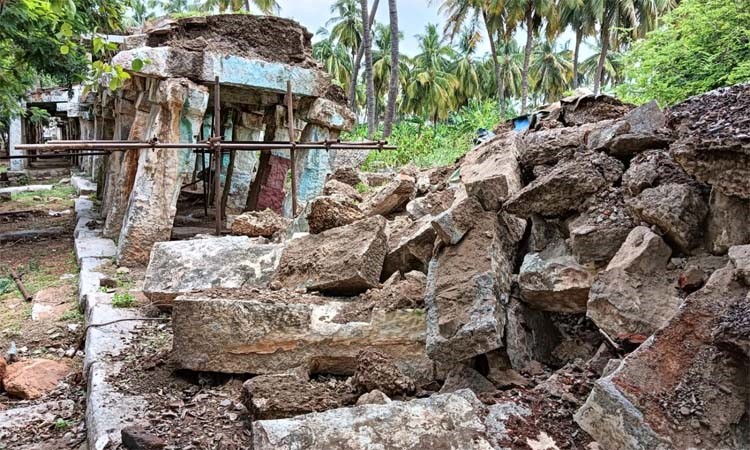
- 27 May 2024
Why is it in the News?
The historical Saalu Mantap (pillar line), located on the premises of the Virupaksha Temple in Hampi, a UNESCO World Heritage Site, collapsed after heavy rain lashed the region on Tuesday night.
What is the Historical Significance of Virupaksha Temple?
- The Virupaksha temple gained prominence and underwent extensive expansion in the 14th century during the Vijayanagara Empire (1336 to 1646).
- Founded by Harihara I of the Sangama dynasty, the Vijayanagara Empire expanded from a strategic position on the banks of the Tungabhadra River to become one of the most powerful kingdoms of its time.
- The temple was built by Lakkan Dandesha, a nayaka (chieftain) under the ruler Deva Raya II, also known as Prauda Deva Raya of the Vijayanagara Empire.
- The temple flourished under the patronage of the Vijayanagara rulers, who were great builders and patrons of art.
- It became a vital centre for the religious and cultural activities of its time.
- It is a prime example of Dravidian temple architecture, characterised by its grand gopurams (towering gateways), the shikhara towering over the sanctum sanctorum, its intricate carvings and pillared halls.
- Richly adorned with carvings and sculptures, the gopuram depicts various deities, mythological scenes and animals.
- The sanctum sanctorum houses the Shiva lingam, the main object of worship.
- Historians say all temples had pavilions where traders sold articles, such as those used in worship.
- Sometimes devotees visiting the temple also camped under the pavilions.
- With several other temples and structures located there, Hampi was the empire’s capital city and stands today as evidence of what is known as the last ‘great Hindu empire’ of South India.
- UNESCO also recognised its uniqueness and categorised the Group of Monuments at Hampi as a World Heritage Site.
Zero Debris Charter
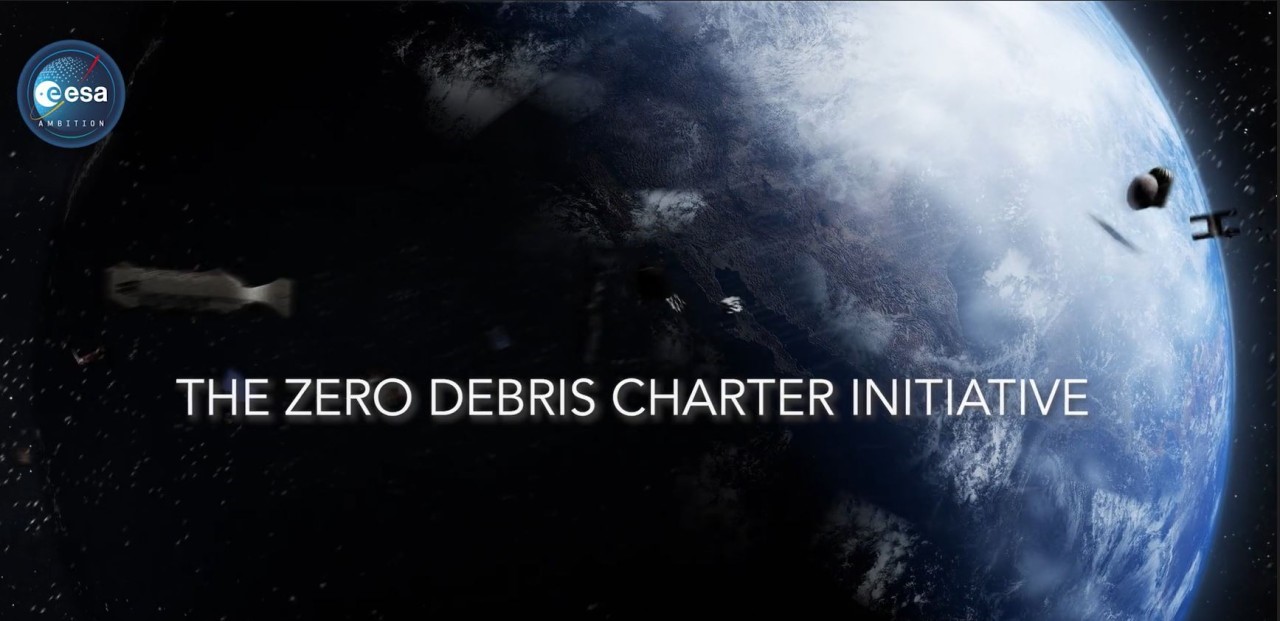
- 27 May 2024
Why is it in the News?
Twelve nations have signed the Zero Debris Charter at the ESA/EU Space Council, solidifying their commitment to the long-term sustainability of human activities in Earth orbit.
What is the Zero Debris Charter?
- The Zero Debris Charter is an initiative of the European Space Agency (ESA) and a non-legally binding, technically driven and community-building instrument.
- It is a world-leading effort to become debris-neutral in space by 2030.
- It outlines high-level guiding principles and sets ambitious, collectively defined targets to realize the goal of Zero Debris.
- The charter has been endorsed by countries including Austria, Belgium, Cyprus, Estonia, Germany, Lithuania, Poland, Portugal, Romania, Slovakia, Sweden, and the United Kingdom.
What are Space Debris?
- Space debris encompasses all non-functional, man-made objects in Earth's orbit or re-entering the Earth's atmosphere.
- This category includes decommissioned satellites, spent rocket bodies, fragments resulting from spacecraft breakups or collisions, and debris from anti-satellite weapon tests.
- Presently, there are over one million pieces of space debris larger than one centimetre orbiting Earth.
What are the Concerns with Space Debris?
- Threat to Space Infrastructure: Collisions with operational satellites can disrupt navigation and communication systems on Earth.
- Kessler Syndrome: The uncontrolled accumulation of debris can trigger an escalating cascade of collisions, exacerbating the problem.
- Risk on Earth: Large space debris re-entering the atmosphere uncontrollably poses risks to the population on the ground.
- Increased Cost: Expensive collision avoidance manoeuvres must be performed to protect valuable space assets.
Initiatives for Space Debris Mitigation:
Global:
- Inter-Agency Space Debris Coordination Committee (IADC): A global entity that coordinates activities related to space debris among various space agencies worldwide.
- Space Debris Mitigation Guidelines: Established by the Committee on the Peaceful Uses of Outer Space (COPUOS), these guidelines provide recommendations for reducing the generation of space debris and promoting the long-term sustainability of outer space activities.
India:
- Debris-Free Space Missions (DFSM): An initiative by ISRO aimed at achieving debris-free space missions by 2030, implemented through the ISRO System for Safe & Sustainable Space Operations Management (IS4OM).
- Project NETRA (NEtwork for Space Object Tracking and Analysis): A project focused on enhancing space situational awareness to monitor and manage space debris.
Astronomical Transients

- 27 May 2024
Why is it in the News?
Recently the Indian-American astronomer Shrinivas Kulkarni was awarded the Shaw Prize for Astronomy in 2024 for his work on the physics of astronomical transients.
What are Astronomical Transients?
- Astronomical transients refer to celestial events or phenomena that occur suddenly, brighten or flare up for a brief period of time, and then fade away.
- These events are temporary and transient in nature, lasting from a few seconds to a few years.
Some examples of astronomical transients include:
- Supernovae: These are explosions that mark the end of a massive star's life cycle. They can briefly outshine an entire galaxy before fading away over several weeks or months.
- Gamma-ray bursts (GRBs): These are extremely energetic bursts of gamma-ray radiation that can last from a few milliseconds to several minutes.
- They are believed to be associated with the collapse of massive stars or the merging of compact objects like neutron stars or black holes.
- Novae: These are smaller explosive events on the surface of a white dwarf star in a binary system, caused by the accretion of material from a companion star.
- Tidal disruption events (TDEs): These occur when a star passes too close to a supermassive black hole and is torn apart by the black hole's gravitational forces, leading to a flare of electromagnetic radiation.
- Fast radio bursts (FRBs): These are intense bursts of radio waves that last only a few milliseconds and originate from distant galaxies. Their exact sources are still being investigated.
- Gravitational wave transients: These are transient events detected as gravitational waves, such as the merging of binary black holes or neutron stars, which produce a brief burst of gravitational radiation.
- Comets and asteroids: The close approach or impact of comets and asteroids can produce transient phenomena like outbursts, flares, or even temporary atmospheres around them.
- Astronomical transients are important for understanding various astrophysical processes, the evolution of celestial objects, and for studying the properties of the universe on different timescales.
Small Island Developing States
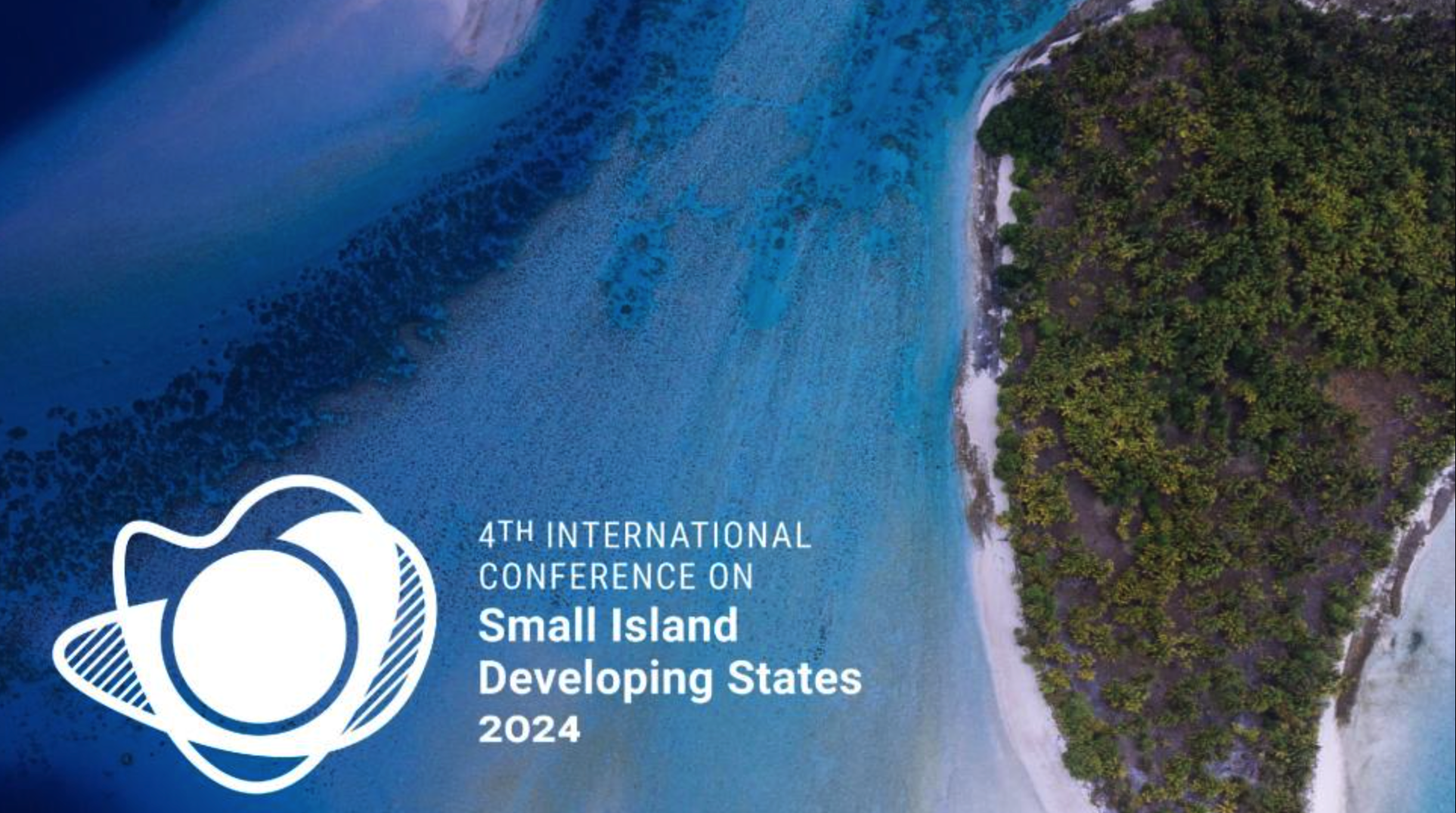
- 27 May 2024
Why is it in the News?
The Fourth International Conference on Small Island Developing States (SIDS-4) will be convened from May 27-30, 2024.
About Small Island Developing States (SIDS):
- Small Island Developing States (SIDS) are a distinct group of 39 States and 18 Associate Members of United Nations regional commissions that face unique social, economic and environmental vulnerabilities.
- The three geographical regions in which SIDS are located are:
- The Caribbean
- The Pacific
- The Atlantic, Indian Ocean and South China Sea (AIS)
- SIDS were recognized as a special case both for their environment and development at the 1992 United Nations Conference on Environment and Development held in Rio de Janeiro, Brazil.
- The aggregate population of all the SIDS is 65 million, slightly less than 1% of the world’s population, yet this group faces unique social, economic, and environmental challenges.
- SIDS face a host of challenges including for many, their remote geography.
- As a result, many SIDS face high import and export costs for goods as well as irregular international traffic volumes.
- For SIDS, the Exclusive Economic Zone (EEZ)—the ocean under their control—is, on average, 28 times the country’s land mass.
- Thus, for many SIDS the majority of the natural resources they have access to comes from the ocean.
- Factors like small population size, remoteness from international markets, high transportation costs, vulnerability to exogenous economic shocks and fragile land and marine ecosystems make SIDS particularly vulnerable to biodiversity loss and climate change because they lack economic alternatives.
- Climate change has a very tangible impact on SIDS.
- Slow onset events such as sea level rise pose an existential threat to small island communities, requiring drastic measures such as relocation of populations, and the related challenges this poses.
- These challenges are compounded by limited institutional capacity, scarce financial resources and a high degree of vulnerability to systemic shocks.
- Industries like tourism and fisheries can constitute over half of the GDP of small island economies.
- However, the importance of these natural resources extends beyond the economy; biodiversity holds aesthetic and spiritual value for many island communities.
- For centuries, these communities have drawn benefits from biodiversity in the form of food supply, clean water, reduced beach erosion, soil and sand formation, and protection from storm surges.
- At the regional level, SIDS are also supported by inter-governmental organisations, primarily the?Caribbean Community (CARICOM),?the?Pacific Islands Forum (PIF)?and the Indian Ocean Commission (IOC).
Kazi Nazrul Islam
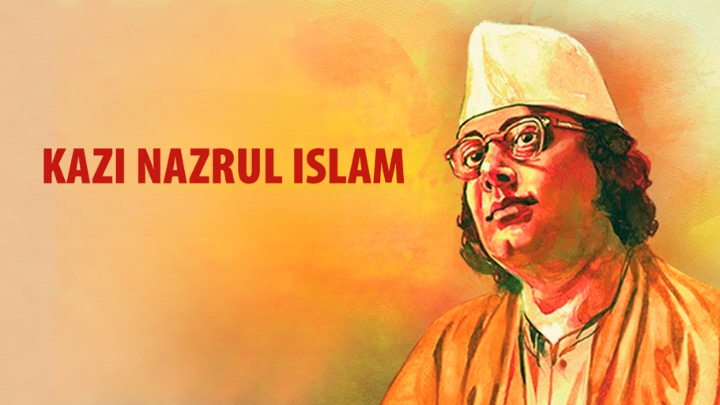
- 25 May 2024
Why is it in the News?
One hundred and twenty-five years ago on May 25, 2024, a ‘rebel poet’ was born in undivided Bengal who would go on to create about 4,000 songs and several stories to remind his warring and impoverished country folks of the power of humanity to tide over hunger, poverty and disintegration of society.
Who was Kazi Nazrul Islam?
- Kazi Nazrul Islam (1899-1976) was a Bengali poet, writer, and musician whose oeuvre, Nazrulgeeti (Songs of Nazrul), constitutes a musical genre that is perhaps second in popularity to only Rabindrasangeet, the compositions of Rabindranath Tagore.
- He enjoys iconic status in West Bengal, Bangladesh, and the Bengali diaspora around the world, and is revered as the National poet of Bangladesh.
- Nazrul is known as the Bidrohi Kobi (Rebel Poet) because most of the more than 4,000 songs that he wrote and composed are songs of protest and revolution, which inspired the freedom fighters of Bengal in their struggle against colonialism and imperialism.
- In 1923, the British arrested Nazrul because of the strongly anti-British content of a magazine that he founded and edited.
- His first poem was published when he was still in Karachi, in the Bangiya Mussalman Sahitya Patrika.
- Some of the poems he had composed and contributed in Moslem Bharat included Shatil Arab, Moharram, Korbani, Fatiha, Doazdaham, Badal Prater Sharab, and Kheya Parer Tarani, amongst others.
- The political conditions in which Nazrul Islam eventually began his career as a writer were ones conditioned by extreme tensions and conflict including the Jallianwala Bagh massacre and launch of the Non-Cooperation Movement following the special session of the Indian National Congress, and especially in the context of the “divide and rule” policy which was adopted by the British.
- Several issues that the populace of the subcontinent had to deal with included economic backwardness, racial prejudices, and social inequality.
- In such circumstances, he joined a Bengali newspaper called Naba-Yug (New Era).
- His writings were later compiled and published as a book Yugabani (Message of the Age) which was immediately banned by the British government.
- Apart from writing and working for several other newspapers of the times, including Sevak, he had also started his own political weekly in 1922, named, Dhumketu (The Comet).
- The paper explicitly voiced their opinions against the British government and played an important role in steering the rebellious attitude and voices of the populace.
- As a result, Nazrul was charged with charges of sedition and he was sentenced to 1 year of rigorous imprisonment in 1923.
- On this occasion, Rabindranath Tagore had also dedicated a newly composed dance-drama Basanti to Nazrul, which was performed in Calcutta.
- Nazrul Islam was a prolific poet and composed several poems on various themes including themes of social messages, and resistance against the colonial government.
- He had effectively used his poems as a literary conduit to voice his opinions against British colonial rule.
- The highest point of his career as a poet was when he composed the poem Bidrohi (The Rebel).
- The poem was highly appreciated and established him as a well-respected poet.
- The poem was characterized by a revolutionary spirit and rife with heroic sentiments.
- It portrayed a revolutionary who had called upon the marginalized sections of the society to rise up and face the British despots.
- The compositions of Kazi Nazrul Islam in the form of songs, poems, and other forms of literature formed a very strong and powerful weapon against British colonial rule.
- The revolutionary themes which were explicit in his writings played an important role during the freedom movement.
- He consistently raised his voice against communalism, imperialism, fundamentalism and exploitation.
- His literary legacy is remembered and acknowledged to this date.
- He had earned the respect of not only his contemporaries but also of the later generations.
- His contributions thus are not limited to the efflorescence of Bengali literature but also extended to the cause of freedom during the Indian Independence Movement.
Gliese 12b
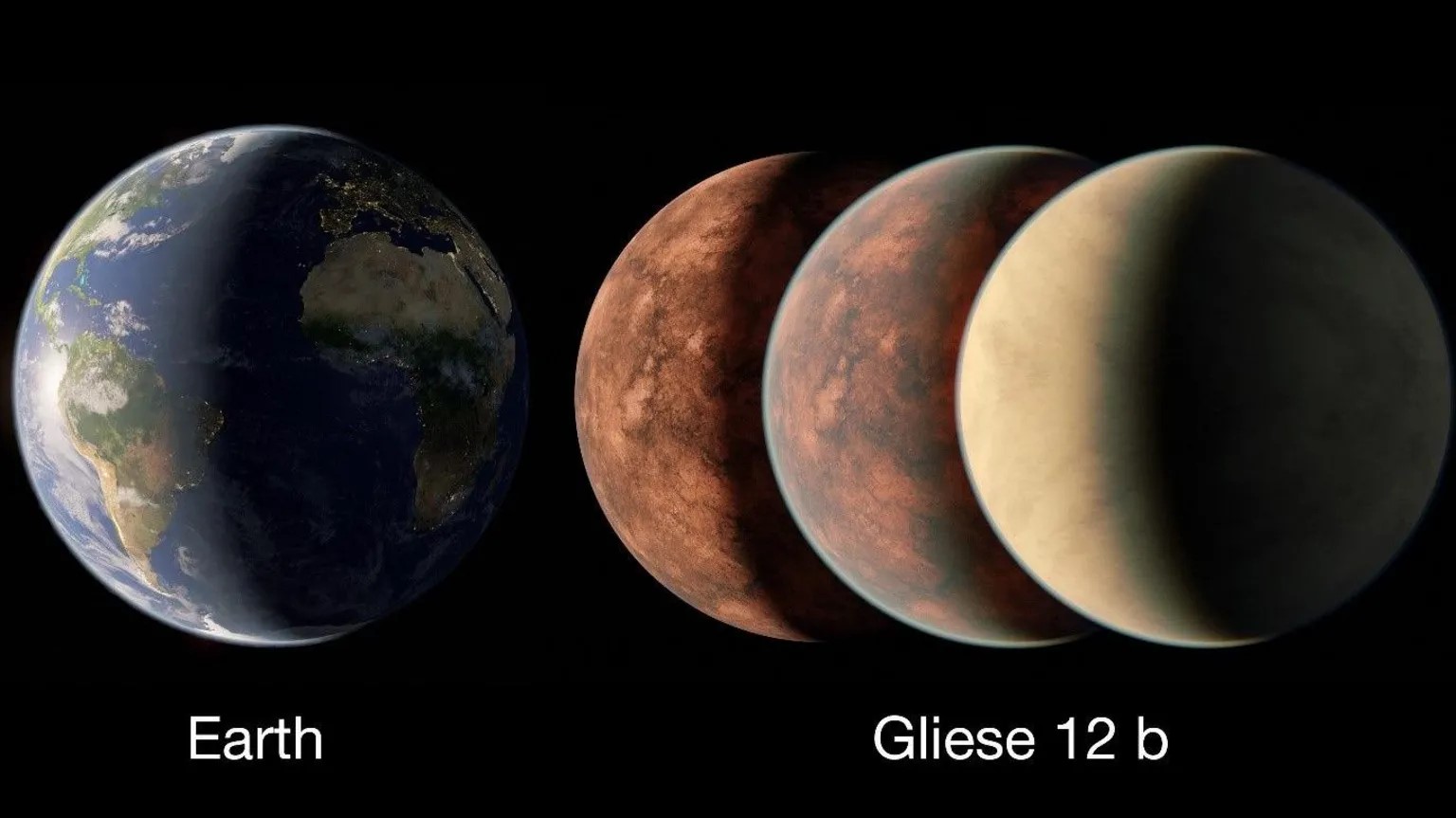
- 25 May 2024
Why is it in the News?
Recently, scientists have discovered a new planet that they say could "potentially support human life."
What is Gliese 12b?
- Gliese 12 b is a rocky planet just 40 light-years away from Earth.
- It orbits around a star called Gliese 12, a cool red dwarf in the constellation Pisces.
- This star is only 27 per cent of the size of our sun, with about 60 per cent of its surface temperature.
- But it's this lower temperature that makes Gliese 12 b theoretically habitable for humans.
- Gliese 12 b is one of the few known rocky planets where humans could theoretically survive according to scientists.
- The planet was discovered by an international team, in collaboration with NASA and the European Space Agency, using data from NASA's Transiting Exoplanet Survey Satellite (TESS) and ESA's Characterizing Exoplanet Satellite (CHEOPS).
- Gliese 12 b falls into this "Goldilocks zone," with an average temperature of 107 degrees Fahrenheit and a size somewhere between Venus and Earth.
- The researchers hope that by learning more about Gliese 12 b's atmosphere we may be able to answer questions about the evolution of our own solar system and other habitable planets.
About the Transiting Exoplanet Survey Satellite (TESS):
- TESS is a NASA mission dedicated to discovering exoplanets around nearby bright stars.
- It was launched on April 18, 2018, aboard a SpaceX Falcon 9 rocket from Cape Canaveral.
- TESS operates in a unique high Earth orbit with a period of 12 to 15 days.
- This orbit is designed to keep the telescope's view largely unobstructed by Earth and the Moon.
- The prime mission concluded on July 4, 2020, but TESS continues to operate on an extended mission.
- TESS has identified a wide range of exoplanets, from small rocky worlds to giant planets, highlighting the diversity of planetary systems in our galaxy.
- TESS uses the transit method to find exoplanets. It monitors stars for periodic dips in brightness, which occur when a planet crosses in front of the star along our line of sight.
- The size of the dip indicates the planet's diameter and the duration of the transit provides information about the planet's orbit.
- The transit method allows scientists to determine the diameter and orbital size of exoplanets.
- Orbits within certain ranges fall into the "habitable zone," where conditions may allow liquid water to exist on the surface of Earth-like worlds.
Taiwan Strait/Formosa Strait
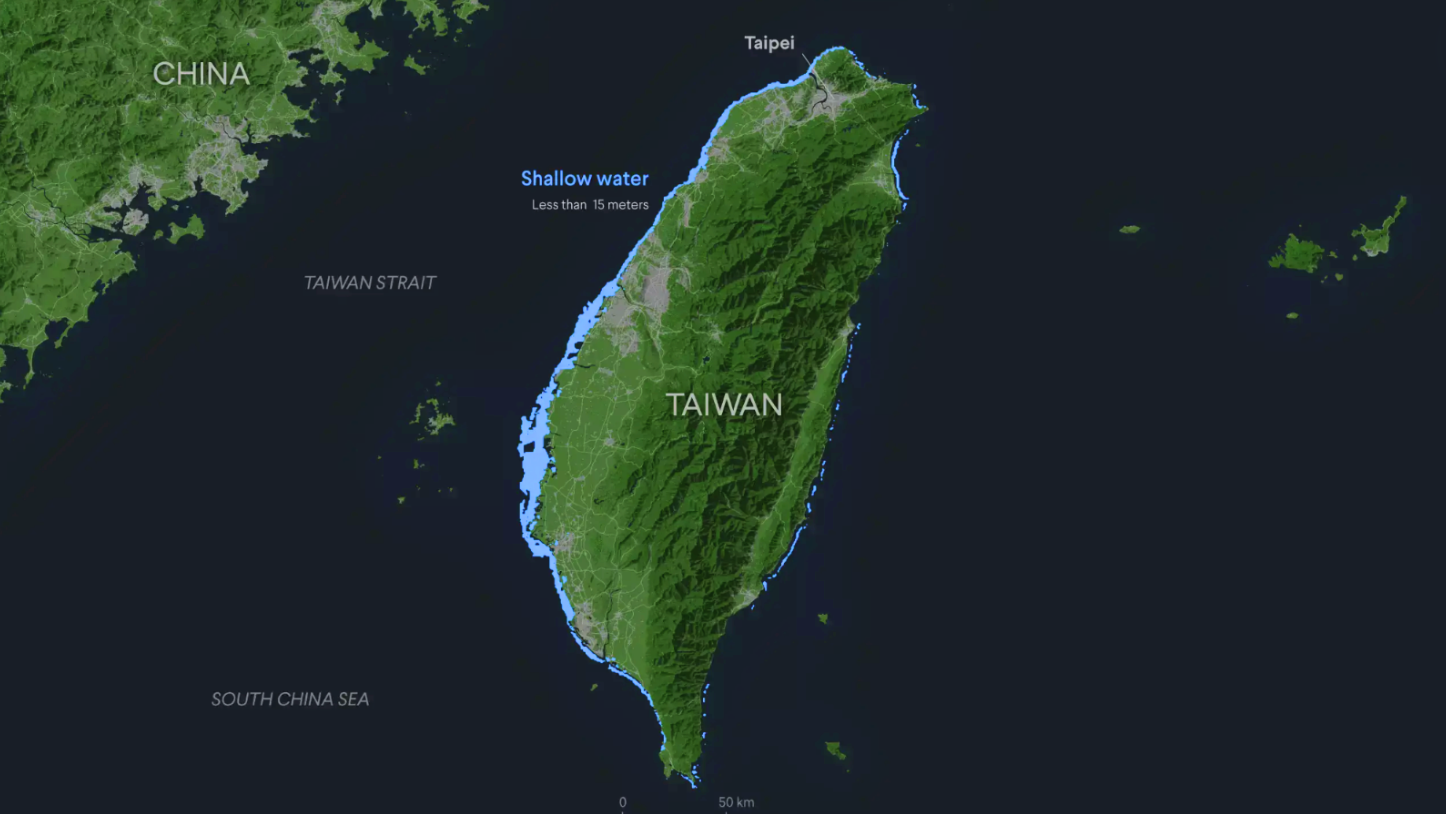
- 25 May 2024
Why is it in the News?
China ended two days of war games around Taiwan, in which it simulated attacks with bombers and practised boarding ships, and Taiwan's defence ministry detailed on Saturday the surge of Chinese warplanes and warships involved.
About the Taiwan Strait:
- Geography: The Taiwan Strait, also known as the Formosa Strait, is a 180 km-wide body of water separating mainland China from the island of Taiwan.
- It lies between the coast of Fujian Province in China and Taiwan.
- Location: The strait is part of the South China Sea and connects to the East China Sea in the north.
- The seafloor is primarily a continental shelf extending from the Asian continent, with Taiwan situated on the outer edge.
- The strait is relatively shallow, with an average depth of about 490 feet and a minimum depth of 82 feet.
- Islands: Major islands on the Taiwan side include Penghu (or Pescadores), Kinmen, and Matsu.
- On the Chinese side, Xiamen and Pingtan are significant islands.
- While Xiamen and Pingtan are administered by the People's Republic of China, Penghu, Kinmen, and Matsu are governed by the Republic of China (Taiwan).
- Shipping Corridor: The Taiwan Strait is a vital global shipping route, with nearly 50 per cent of global container shipping passing through the Taiwan Strait.
- Key ports in the region include Amoy in mainland China and Kao-hsiung in Taiwan.
- Historical Significance: The strait has been a site of military confrontations between the People's Republic of China and Taiwan since 1949, following the Chinese Civil War.
- The Kuomintang forces, led by Chiang Kai-shek, retreated across the strait and established their government in Taiwan.
- Median Line: The median line is an informal dividing line in the Taiwan Strait, established during the Cold War to reduce the risk of military clashes between China and Taiwan.
- Although not formalized by any treaty, it served as a tacit boundary until 2019, when Chinese military aircraft began crossing it.
- Beijing has since increasingly challenged the existence of the median line by frequently sending warplanes over it.
World Health Assembly 2024
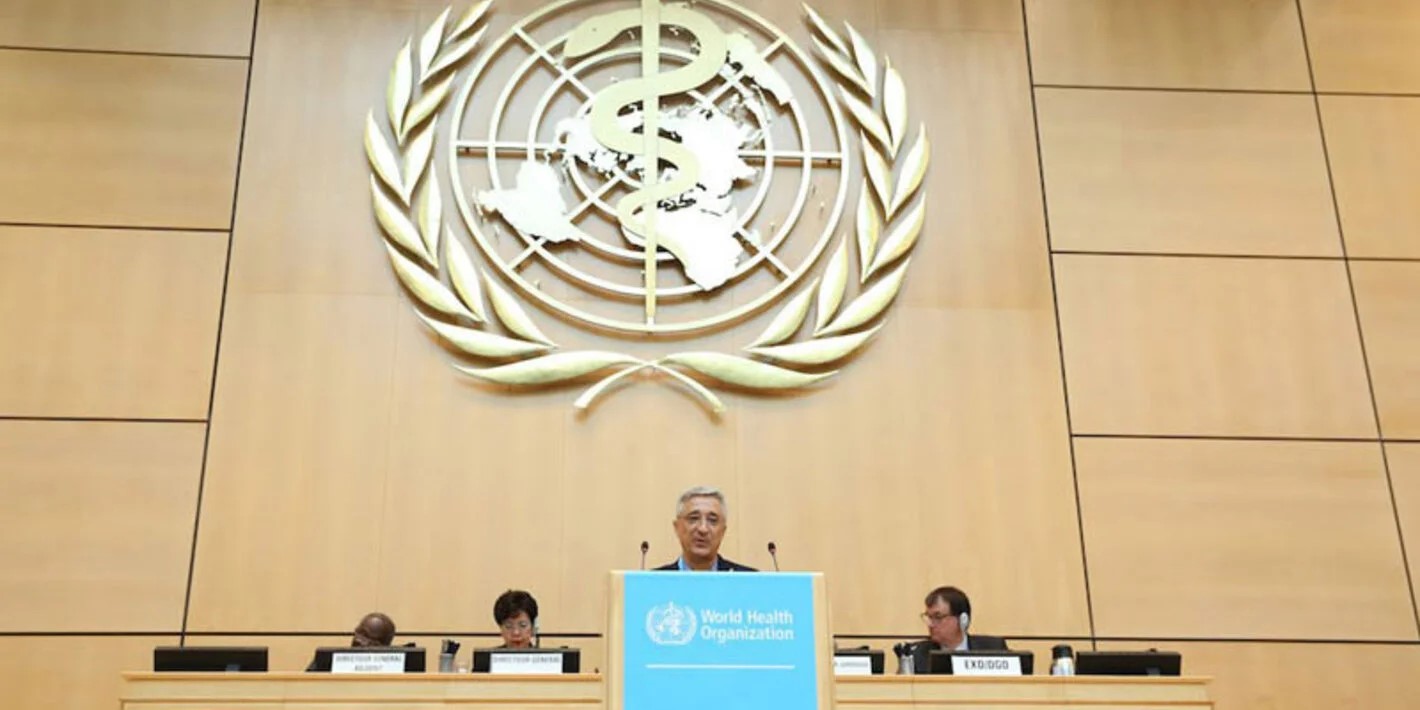
- 25 May 2024
Why is it in the News?
The World Health Assembly will convene from May 27 to June 1 to discuss amendments to the International Health Regulations, aimed at improving the ability of countries to respond to public health emergencies and prepare a potential new pandemic agreement.
What is the World Health Assembly?
- The World Health Assembly is the decision-making body of the World Health Organization (WHO), the United Nations (UN) agency dedicated to promoting the global population's health and access to the highest levels of healthcare provision.
- Its main functions are to determine WHO's policies, elect the Organization's Director-General, supervise financial policies, and review and approve the proposed WHO budget.
- Delegates from WHO member states come together at an annual assembly held at the UN headquarters in Geneva, Switzerland, to focus on a specific healthcare agenda created by the organization's Executive Board.
- The Executive Board comprises 34 technically qualified members, each elected for a three-year term.
- They meet every year in January to agree on the agenda and any resolutions that will be put before the World Health Assembly for consideration.
- Now in its 76th session, the theme for this year’s event is “Health For All: 75 Years of Improving Public Health”.
What does the Assembly do?
- Delegates at the annual World Health Assembly discuss the Executive Board's policy agenda for the coming year and decide which health goals and strategies will guide the WHO's public health work.
- Other functions include voting to appoint the organization's Director-General to serve a five-year term.
- Dr Tedros Adhanom Ghebreyesus holds the post currently, having been re-elected in 2022 to serve a second term as head of the world's leading public health agency.
Why is it important?
- Since its inauguration, the Assembly has presided over WHO policies that have helped eradicate deadly diseases like smallpox and the poliovirus and helped foster international collaborations to develop and distribute vaccines for diseases like malaria and COVID-19.
About International Health Regulations (IHR):
- First adopted by the World Health Assembly (WHA) in 1969, the IHR was last revised in 2005. These regulations aim to maximize collective efforts in managing public health events while minimizing disruptions to travel and trade.
- The IHR has 196 State Parties, including all 194 WHO Member States, plus Liechtenstein and the Holy See.
- The IHR provide a comprehensive legal framework that outlines countries' rights and obligations in managing public health events and emergencies with the potential to cross borders.
- The regulations introduce crucial safeguards to protect the rights of travellers and others, covering the treatment of personal data, informed consent, and non-discrimination in the application of health measures.
- Legally Binding Instrument: As an instrument of international law, the IHR is legally binding on 196 countries.
Sweet Sorghum
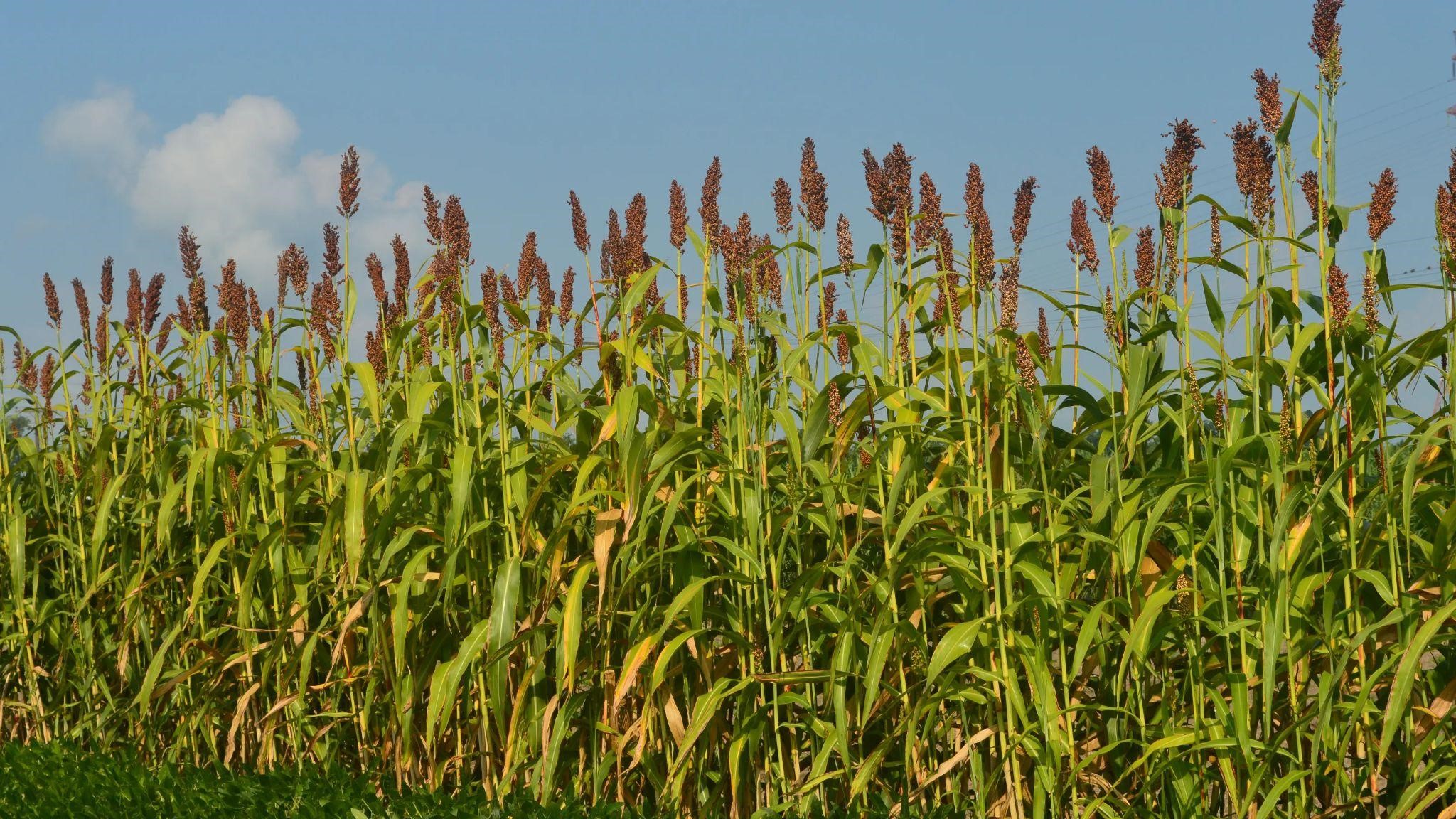
- 24 May 2024
Why is it in the News?
Governments should be using their agriculture extension services to raise awareness among farmers, and consumers about the benefits & practical applications of sweet sorghum in people’s diet.
About Sweet Sorghum:
- Sweet sorghum is the most important millet crop occupying the largest area among the cereals next to rice.
- It is mainly grown for its grain and fodder.
- Alternative uses of sorghum include commercial utilization of grain in the food industry and utilization of stalk for the production of value-added products like ethanol, syrup jaggery and enriched bagasse as fodder and as a base material for cogeneration.
- Sweet sorghum has emerged as a supplementary crop to sugarcane in dry land pockets for the production of ethanol.
- The success rate is high because of the use of existing machinery available in the sugar factories and attached distilleries.
- The advantages of the crop are it can be grown with limited water and minimal inputs and it can be harvested in four months.
Climate and Soil:
- Sweet sorghum can be sown in June with the southwest monsoon, in September-October with the northeast monsoon (500-600 mm rainfall), or in summer with assured irrigation.
- The crop prefers moderate rainfall; excessive moisture or heavy rain after flowering can reduce sugar content.
- With irrigation, early sowing before June can prevent issues with heavy rains during flowering and grain maturation.
- Summer sowing may result in lower biomass and sugar yield. Sweet sorghum thrives in well-drained soils of medium depth (18" and above), with water requirements varying by soil type (red, black, laterite, and loamy).
Multiple Uses of Sweet Sorghum:
- Sweet sorghum is a versatile crop used for grain, animal feed, and sugary juice.
- Its grains are made into steamed bread, porridge, and beer, providing high nutritional value with proteins, carbohydrates, fibre, and essential minerals like potassium, calcium, sodium, and iron.
- Resilient in arid climates, sweet sorghum produces significant biomass, which, along with grains, serves as high-quality animal feed.
- The sugary juice from its stalks is used for bioethanol production, yielding more ethanol per hectare than maize, second only to sugarcane.
- Notably, sweet sorghum is drought-resistant, capable of dormancy during dry periods and resuming growth later.
- Its tolerance to low water, nitrogen inputs, salinity, and drought stress makes it ideal for arid regions, making it popular in the US, Brazil, and China.
Shallow Aquifer Management (SAM)
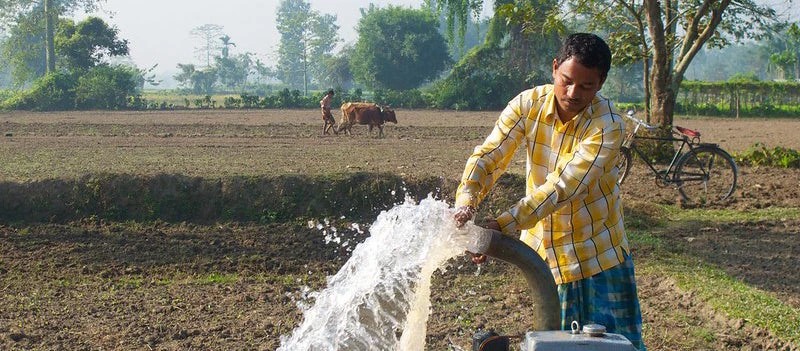
- 24 May 2024
Why is it in the News?
Securing water for the future as the mantra, the Greater Hyderabad Municipal Corporation (GHMC) in the latest intervention has taken up the Shallow Aquifer Management (SAM) model on a pilot basis in the city.
What is an Aquifer?
- An aquifer is a body of porous rock or sediment that is saturated with groundwater.
- Groundwater enters an aquifer through precipitation that seeps down through the soil.
- It can then move through the aquifer and emerge at the surface via springs and wells.
- Aquifers are classified into two types:
- Deep Aquifers
- Shallow Aquifers
What is Shallow Aquifer Management (SAM)?
- In 2022, the Atal Mission for Rejuvenation and Urban Transformation (AMRUT) launched a Shallow Aquifer Management (SAM) pilot program in ten cities across nine states:
- Bengaluru (Karnataka), Chennai (Tamil Nadu), Dhanbad (Jharkhand), Gwalior (Madhya Pradesh), Hyderabad (Telangana), Jaipur (Rajasthan), Kolkata (West Bengal), Pune and Thane (Maharashtra), and Rajkot (Gujarat).
- The SAM pilot is overseen by the National Institute of Urban Affairs (NIUA) and supported by the Advanced Center for Water Resources Development and Management (ACWADAM) in Pune and the Biome Environmental Trust in Bengaluru.
- Under SAM, the Greater Hyderabad Municipal Corporation (GHMC) has identified five municipal parks for implementation this year.
How does it work?
- The project involves drilling shallow water injection borewells to depths of 100-120 feet to extract water from shallow aquifers.
- This process helps recharge the underlying layers during rainfall events by collecting water from the surrounding watershed and directing it through recharge pits.
- Consequently, underground water layers are replenished, leading to a rise in the water table.
Tropical Cyclone Remal
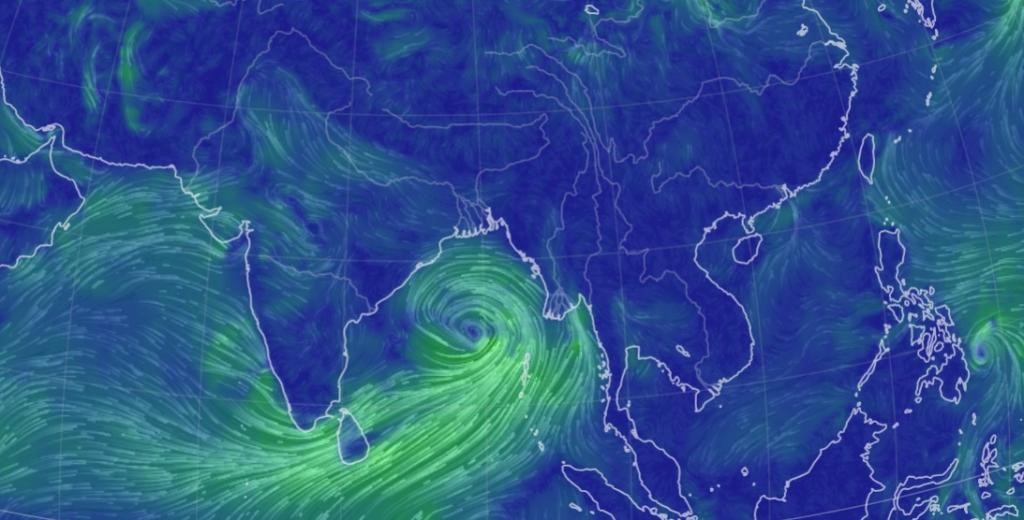
- 24 May 2024
Why is it in the News?
The first cyclone in the Bay of Bengal this pre-monsoon season, Cyclone Remal, is expected to make landfall between Sagar Island in West Bengal and Bangladesh's Khepupara on Sunday midnight.
About Cyclone Remal:
- The IMD has forecasted that a depression in the Bay of Bengal is likely to concentrate into a severe cyclonic storm and make landfall between Sagar Island in West Bengal and Khepupara in Bangladesh around May 26 midnight.
Name of the cyclone:
- If the cyclone is formed, it will be named 'Remal', which means 'sand' in Arabic.
- The cyclone has been named ‘Remal’, according to a system of naming cyclones in the Indian Ocean region.
- A standard naming convention is followed for tropical cyclones forming in the North Indian Ocean, including the Arabian Sea and the Bay of Bengal.
- As the IMD is a part of the Regional Specialised Meteorological Centres (RSMCs), it gives names to the tropical cyclones after consulting 12 other countries in the region.
- The name 'Remal' has been suggested by Oman which means 'sand' in Arabic.
What is a Tropical Cyclone?
- A tropical cyclone is a rapidly rotating storm system characterized by a low-pressure centre, strong winds, and a spiral arrangement of thunderstorms that produce heavy rain.
- These cyclones develop over warm tropical or subtropical waters and can cause significant damage due to high winds, heavy rainfall, and storm surges.
How a Tropical Cyclone is Formed?
- Tropical cyclones form over warm ocean waters near the equator.
- The process begins when warm, moist air rises from the ocean surface, creating an area of low pressure.
- This causes surrounding air with higher pressure to move toward the low-pressure area, warming up and rising as well.
- As this air rises and cools, the moisture condenses to form clouds.
- The system of clouds and wind starts to spin and grow, fueled by the ocean's heat.
- When the wind speeds increase sufficiently, an eye forms in the centre of the cyclone.
Characteristics of a Tropical Cyclone:
- Calm Center: The eye of the cyclone is calm and clear, with very low air pressure.
- High Wind Speeds: The average wind speed of a tropical cyclone is around 120 km/h.
- Closed Isobars: These are lines on a weather map that connect areas of equal atmospheric pressure, leading to greater wind velocity.
- Oceanic Origin: Tropical cyclones develop over oceans and seas.
- Movement: They typically move from east to west under the influence of trade winds.
- Seasonal: Tropical cyclones are seasonal phenomena.
How are Cyclones Classified?
- The Indian Meteorological Department (IMD) classifies cyclones based on wind speeds:
- Depression: Wind speeds between 31–49 km/h
- Deep Depression: Wind speeds between 50-61 km/h
- Cyclonic Storm: Wind speeds between 62–88 km/h
- Severe Cyclonic Storm: Wind speeds between 89-117 km/h
- Very Severe Cyclonic Storm: Wind speeds between 118-166 km/h
- Extremely Severe Cyclonic Storm: Wind speeds between 166-221 km/h
- Super Cyclonic Storm: Wind speeds above 222 km/h
Global Species Action Plan (GSAP) SKILLS Platform
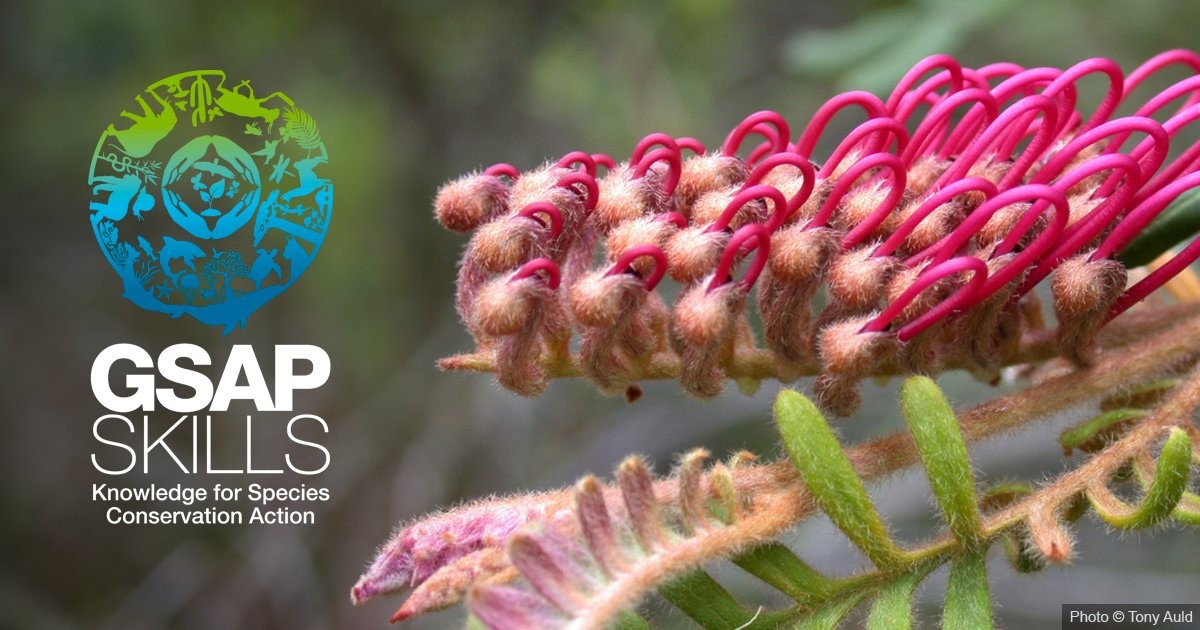
- 24 May 2024
Why is it in the News?
In response to the escalating biodiversity crisis, the Global Species Action Plan (GSAP) is designed to support the implementation of the Kunming-Montreal Global Biodiversity Framework (GBF).
About GSAP SKILLS Platform:
- The Global Species Action Plan (GSAP) SKILLS platform, standing for (Species Conservation Knowledge, Information, Learning, Leverage, and Sharing), brings the GSAP’s content online and enables real-time updates of technical tools and resources.
- This platform aims to facilitate global collaboration and partnership by connecting decision-makers, species conservation practitioners, and experts at all levels.
- It ensures accessibility and relevance by providing real-time updates on technical tools and resources.
- Each target within the Global Biodiversity Framework is accompanied by a summary and rationale for species conservation interventions, actions, and sub-actions, along with the actors involved and the technical tools and resources required, facilitating the scaling-up of implementation efforts.
- Managed proactively by the International Union for Conservation of Nature (IUCN), the platform meets the needs of governments and stakeholders to take decisive action for species conservation.
- The development of the GSAP SKILLS platform has been principally supported by the Ministry of Environment, Republic of Korea, with additional resources from the Tech4Nature Initiative, launched by IUCN and Huawei in 2020.
What is the Global Species Action Plan?
- It has been developed to support the implementation of the Kunming-Montreal Global Biodiversity Framework (GBF) and to address the increasing biodiversity loss worldwide.
- It outlines strategic interventions and actions to conserve and sustainably manage species while ensuring equitable benefits.
About Kunming-Montreal Global Biodiversity Framework:
- The Kunming-Montreal Global Biodiversity Framework (GBF) is an outcome of the 2022 United Nations Biodiversity Conference.
- Its tentative title had been the "Post-2020 Global Biodiversity Framework".
- The GBF was adopted by the 15th Conference of Parties (COP15) to the Convention on Biological Diversity (CBD) on 19 December 2022.
- It has been promoted as a "Paris Agreement for Nature".
- It is one of a handful of agreements under the auspices of the CBD, and it is the most significant to date.
- It has been hailed as a "huge, historic moment" and a "major win for our planet and for all of humanity."
- UN Secretary-General António Guterres speaking at the 2022 biodiversity conference in Montreal which led to this treaty
- The Framework is named after two cities, Kunming, which was scheduled to be the host city for COP15 in October 2020 but postponed and subsequently relinquished the hosting duties due to China's COVID policy, and Montreal, which is the seat of the Convention on Biological Diversity Secretariat and stepped in to host COP15 after Kunming's cancellation.
The League of Arab States (LAS)/Arab League
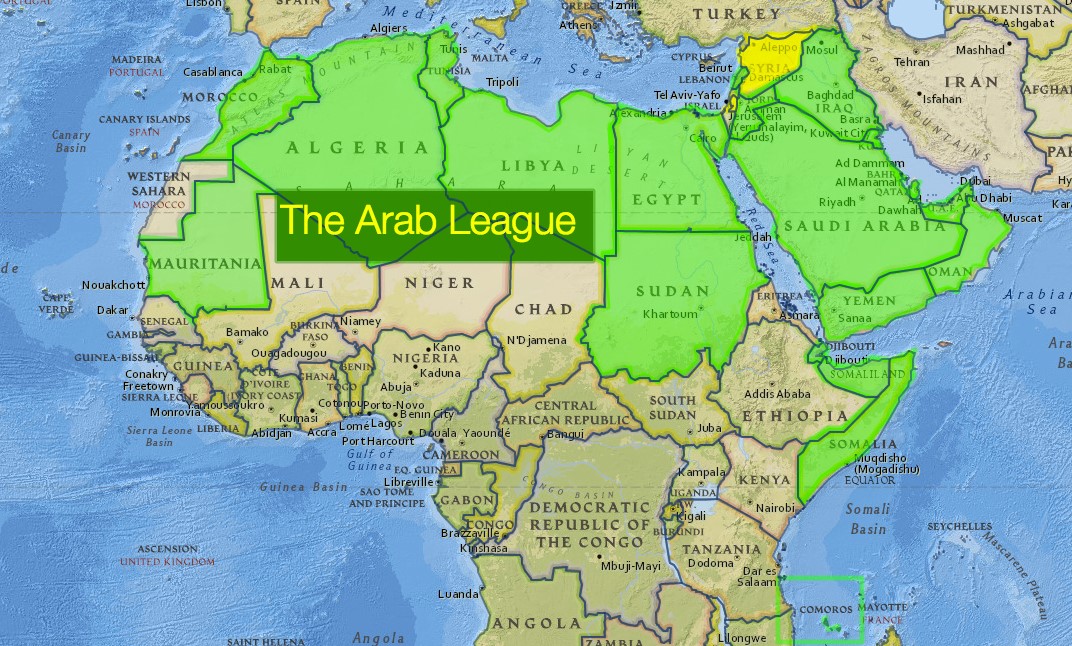
- 24 May 2024
Why is it in the News?
The Arab League called recently for a UN peacekeeping force in the "occupied Palestinian territories" at an international summit dominated by the war between Israel and Hamas.
What is the Arab League?
- The League of Arab States was formed in Cairo on 22 March 1945 with six members: Egypt, Iraq, Transjordan (later renamed Jordan), Lebanon, Saudi Arabia and Syria, with Yemen joining on 5 May 1945.
- It currently has 22 member states; Algeria, Bahrain, Comoros, Djibouti, Egypt, Iraq, Jordon, Kuwait, Lebanon, Libya, Mauritania, Morocco, Oman, Palestinian Authority, Qatar, Saudi Arabia, Somalia, Sudan, Syria, Tunisia, United Arab Emirates and Yemen.
- Four countries have been admitted as observers: Brazil, Eritrea, India and Venezuela.
- Each member state has one vote in the League Council, while decisions are binding only on those states that have voted for them.
- The official language of the Arab League and its 22 member states is Arabic.
- The league seeks to promote the political, social, and military interests of its members.
- The head of the league is known as the secretary-general.
- The secretary-general is appointed to a five-year term by a two-thirds majority of league members.
- Headquarters: Cairo, Egypt.
Goals:
- The overall aim of the league is to promote Arab interests.
- Its main goals are to strengthen and coordinate the political, cultural, economic, and social programs of its members and to try to settle disputes among them or between them and third parties.
- In 1950 the members also agreed to provide military support to help defend each other.
The Arab League Council:
- The League Council is the highest body of the Arab League and is composed of representatives of member states, typically foreign ministers, their representatives, or permanent delegates.
- Each member state has one vote.
- The Council meets twice a year, in March and September. Two or more members may request a special session if they desire.
- The general secretariat manages the daily operations of the league and is headed by the secretary-general.
- The general secretariat is the administrative body of the league, the executive body of the council, and the specialized ministerial councils.
El Niño and La Nina
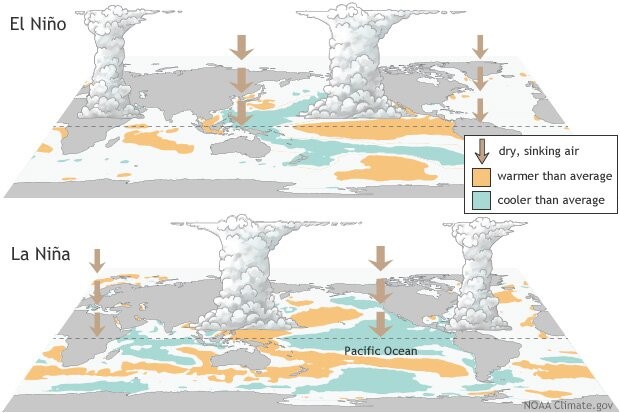
- 23 May 2024
Why is it in the News?
Last month, the India Meteorological Department (IMD) forecasted above-normal rain in the upcoming monsoon season in India, with “favourable” La Nina conditions expected to set in by August-September.
What are El Niño and La Nina?
- El Niño (meaning “little boy” in Spanish) and La Nina (meaning “little girl” in Spanish) are climate phenomena that are a result of ocean-atmosphere interactions, which impact the temperature of waters in the central and eastern tropical Pacific Ocean which affects global weather.
- The Earth’s east-west rotation causes all winds blowing between 30 degrees to the north and south of the equator to slant in their trajectory.
- As a result, winds in the region flow towards a southwesterly direction in the northern hemisphere and a northwesterly direction in the southern hemisphere which is known as the Coriolis Effect.
- Due to this, winds in this belt (called trade winds) blow westwards on either side of the equator.
- Under normal ocean conditions, these trade winds travel westwards along the equator from South America towards Asia.
- Wind movement over the ocean results in a phenomenon called upwelling, where cold water beneath the ocean surface rises and displaces the warm surface waters.
- At times, the weak trade winds get pushed back towards South America and there is no upwelling.
- Thus, warmer-than-usual sea surface temperatures are recorded along the equatorial Pacific Ocean, and this is known as the emergence of El Niño conditions.
- Conversely, during La Nina, strong trade winds push warm water towards Asia.
- Greater upwelling gives rise to cold and nutrient-rich water towards South America.
- Thus, climatologically, El Niño and La Nina are opposite phases of what is collectively called the El Niño Southern Oscillation (ENSO) cycle.
- It also includes a third neutral phase.
- El Niño events are far more frequent than La Nina ones.
- Once every two to seven years, neutral ENSO conditions get interrupted by either El Niño or La Nina.
- Recently, La Nina conditions prevailed between 2020 and 2023.
How could the incoming La Nina impact global weather?
- La Niña, driven by the cooling of ocean waters due to the ENSO (El Niño-Southern Oscillation) cycle, can significantly influence global weather patterns.
- The air circulation loop in the region, affected by these temperature changes, impacts precipitation levels in neighbouring areas and can alter the Indian monsoon.
- Currently, the El Niño event that began in June last year has significantly weakened.
- Neutral ENSO conditions are expected to be established by June.
- Following this, La Niña conditions are anticipated to emerge, with its effects likely becoming apparent from August.
La Nina’s Impact on India:
- With above normal rain forecast, the seasonal rainfall is expected to be 106 per cent of the Long Period Average (LPA), which is 880mm (1971-2020 average).
- Except in east and northeast India, all remaining regions are expected to receive normal or above-seasonal rainfall.
- Heavy rains could result in some regions witnessing riverine and urban flooding, mudslides, landslides and cloudbursts.
- East and northeast India region, during La Nina years, receive below average seasonal rainfall.
- Therefore, there may be a shortfall in water reserves there this year.
- During La Nina years, incidents of thunderstorms generally increase.
- “The east and northern India regions could experience thunderstorms accompanied by lightning.
- With increased farming activities undertaken during the July and August rainy months, which coincides with the season’s enhanced lightning and thunderstorms, there is a high risk of fatalities in these regions.
- In addition to ENSO, there are other parameters that can impact the monsoon.
- However, in a La Nina year, a deficit monsoon over India can be easily ruled out.
La Nina’s Impact on the World:
- Similar to India, Indonesia, the Philippines, Malaysia and their neighbouring countries receive good rainfall during a La Nina year.
- This year, Indonesia has already witnessed floods.
- On the other hand, droughts are common in southern regions of North America, where winters become warmer than usual.
- Canada and the northwestern coast of the United States see heavy rainfall and flooding.
- Southern Africa receives higher than usual rainfall, whereas eastern regions of the continent suffer below-average rainfall.
- ENSO has a huge impact on hurricane activity over the Atlantic Ocean.
- During a La Nina year, the hurricane activity here increases.
- For instance, the Atlantic Ocean churned out a record 30 hurricanes during the La Nina year 2021.
Is Climate Change Affecting ENSO?
- Over India, El Niño is known to suppress the southwest monsoon rainfall and drive higher temperatures and intense heat waves, like the present summer season.
- In the past, monsoon seasons during years following an El Niño were 1982-1983 and 1987-1988, with both 1983 and 1988 recording bountiful rainfall.
- At present too, a similar situation could play out.
- The 2020-2023 period witnessed the longest La Nina event of the century.
- Thereafter, ENSO neutral conditions developed, which soon gave way to El Niño by June 2023 which has been weakening since December last year.
- Scientists say that climate change is set to impact the ENSO cycle.
- Many studies suggest that global warming tends to change the mean oceanic conditions over the Pacific Ocean and trigger more El Niño events.
- The World Meteorological Organization (WMO) has also said that climate change is likely to affect the intensity and frequency of extreme weather and climate events linked to El Niño and La Nina.
Bay of Bengal Initiative for Multi-Sectoral Technical and Economic Cooperation (BIMSTEC)
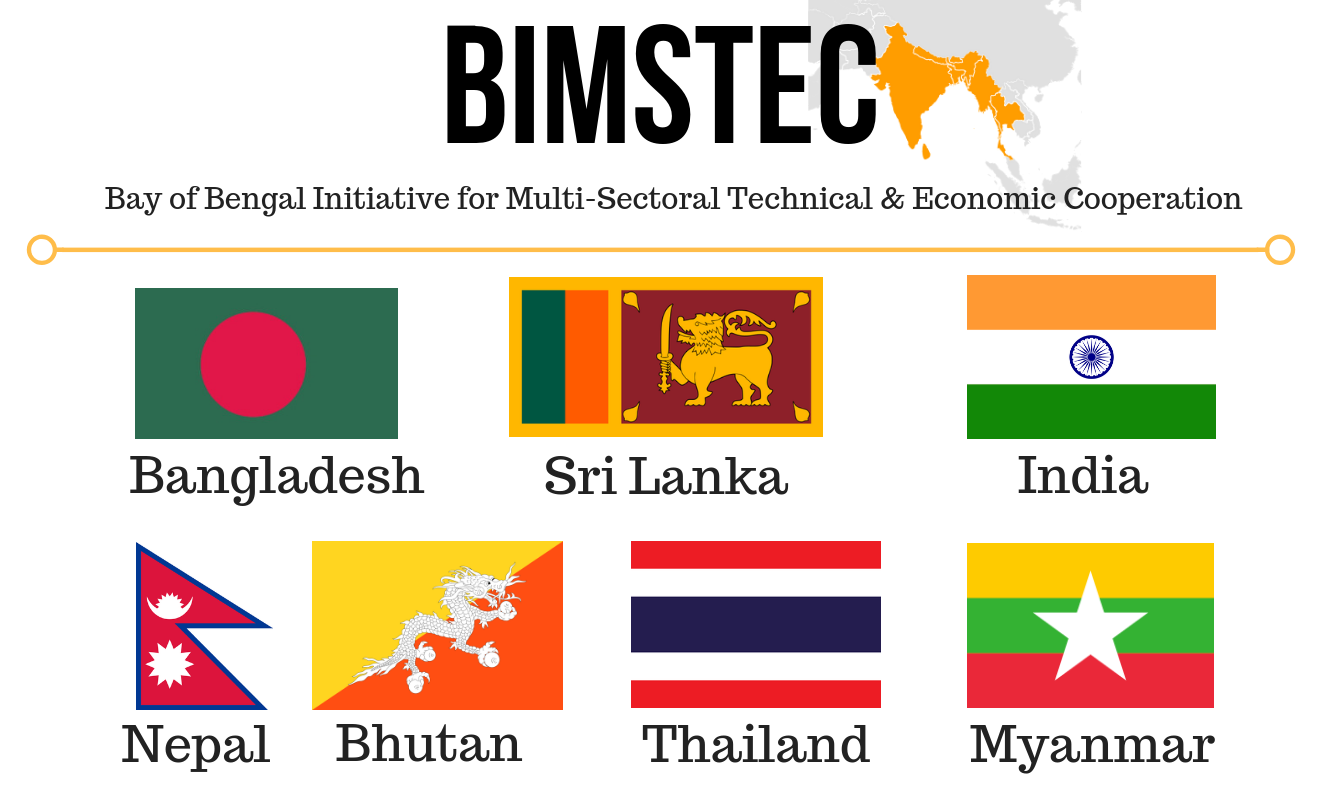
- 23 May 2024
Why is it in the News?
The Bay of Bengal Initiative for Multi-Sectoral Technical and Economic Cooperation (BIMSTEC) will now be open to new members and observers after a historic first charter of the grouping came into force on 20 May.
What is BIMSTEC?
- The Bay of Bengal Initiative for Multi-Sectoral Technical and Economic Cooperation (BIMSTEC) is a multilateral regional organization that brings together seven member states located in the littoral and adjacent areas of the Bay of Bengal, forming a contiguous regional unity.
- Aims: The primary aim of BIMSTEC is to accelerate shared growth and cooperation among littoral and adjacent countries in the Bay of Bengal region.
- Formation: The organization was initially founded as BIST-EC in June 1997, following the adoption of the Bangkok Declaration.
- The founding members included Bangladesh, India, Sri Lanka, and Thailand.
- With Myanmar's entry in late 1997, the organization evolved into BIMST-EC (Bangladesh, India, Myanmar, Sri Lanka, and Thailand Economic Cooperation).
- In 2004, the inclusion of Nepal and Bhutan led to the formation of BIMSTEC, as we know it today.
- The current member states comprise five South Asian nations: Bangladesh, Bhutan, India, Nepal, and Sri Lanka, and two Southeast Asian nations: Myanmar and Thailand.
- BIMSTEC's Permanent Secretariat is situated in Dhaka, Bangladesh, serving as a hub for regional cooperation and coordination among member states.
Areas of cooperation:
- BIMSTEC functions as a sector-driven cooperative organization, initially focusing on six key sectors: Trade, Technology, Energy, Transport, Tourism, and Fisheries.
- Over time, the scope of cooperation has expanded, and as of now, BIMSTEC has identified 14 priority areas of cooperation.
- The inclusion of Climate Change in 2008 marked the 14th priority area.
- Within these priority areas, each member country takes responsibility for leading specific sectors.
- This allows for focused efforts and utilization of regional expertise.
- India, for example, is the leading country in several crucial areas, including Transport & Communication, Tourism, Environment & Disaster Management, and Counter-Terrorism & Transnational Crime.
- This leadership role involves coordinating initiatives, sharing best practices, and driving collaborative efforts within these sectors to enhance regional development and cooperation.
Planetary Alignment

- 23 May 2024
Why is it in the News?
Next month, on June 3, there will be a planetary alignment that may actually allow you to witness six planets align in the sky.
What is a Planetary Alignment?
- Planetary alignment is a term used to describe the positioning of planets in the solar system such that they appear to be in a straight line or close to one when viewed from a specific vantage point, for us that's Earth.
- It is an astronomical event that happens when, by coincidence, the orbits of several of the planets of the Solar System bring them to roughly the same side of the Sun at the same time.
- This phenomenon is more an illusion of perspective rather than the planets being in a perfect line in space.
- It’s important to emphasise that the planets aren’t forming a straight line in space – that’s a much rarer astronomical event called a syzygy.
- However, because all the planets, including the Earth, orbit around the Sun in roughly the same orientation (moving in which we call the “Plane of the Ecliptic”), when they’re on the same side of the Sun as each other, they appear to form a line in the sky when we view them from Earth.”
- Planetary alignments are rather common within themselves, especially when two, three, or even four planets align in the sky.
- Five or more planets aligning, however, is less common.
- April 8, 2024, was the last time the planets were all in alignment.
Which planets will align?
- Mercury, Mars, Jupiter, Saturn, Uranus, and Neptune will form a near-straight line, offering an extraordinary opportunity to witness this cosmic phenomenon.
Which planets will be visible?
- While six planets align, not all of them will be visible to the naked eye, due to their vast distance from Earth.
- Meanwhile, the Moon will also play a spoilsport as it distorts the visibility.
- Mercury and Jupiter will be tricky to see in the sky due to their proximity to the Sun in their orbit.
- However, Mars and Saturn will be visible to the naked eye, though very dim.
- Meanwhile, keen observers will need telescopes or high-powered binoculars to spot the distant planets Uranus and Neptune.
Economic Capital Framework (ECF)
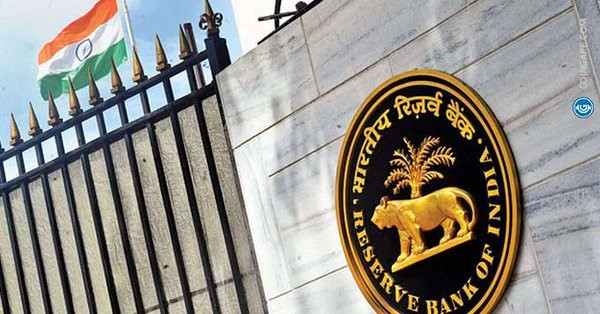
- 23 May 2024
Why is it in the News?
The Central Board of the Reserve Bank of India (RBI) has approved a record surplus transfer of Rs 2.11 lakh crore to the Central government for the fiscal year 2023-24, determined based on the Economic Capital Framework (ECF).
What is the Economic Capital Framework (ECF)?
- The Economic Capital Framework (ECF) is an objective, rule-based, transparent methodology for determining the appropriate level of risk provisions (fund allocation to capital reserve) that is to be made under Section 47 of the Reserve Bank of India Act.
- The Reserve Bank of India (RBI) developed an Economic Capital Framework (ECF) for determining the allocation of funds to its capital reserves so that any risk contingency can be met as well as to transfer the profit of the RBI to the government.
- There are two clear objectives for the ECF.
- First, the RBI as a macroeconomic institution has the responsibility to fight any disorder especially a crisis in the financial system. Here, to meet such a crisis, the RBI should have adequate funds attached under the capital reserve.
- Second, is transferring the remaining part of the net income to the government.
- The process of adding funds to the capital reserve is a yearly one where the RBI allots money out of its net income to the capital reserve.
- How much funds shall be added to the capital reserve each year depends upon the risky situation in the financial system and the economy.
- The process of allocation of funds is technically called as provisioning (risk provisioning etc.,) to the reserves.
- After allotting money to the capital reserve, the remaining net income of the RBI is transferred to the government as profit.
- Since the government is the shareholder of the RBI, the latter’s income (means profit) should be transferred to the Government (Section 47 of the RBI Act).
- Previously, there were several attempts to frame an ECF for the RBI. However, under the changed circumstances, the RBI central board constituted a new committee (under Bimal Jalan) to design an ECF in 2018.
What is a Bimal Jalan Committee?
- The Reserve Bank of India (RBI) in November 2018 had constituted a six-member committee, chaired by former governor Dr Bimal Jalan, to review the current economic capital framework (ECF), after the Ministry of Finance asked the central bank to follow global practices.
What did the Bimal Jalan Committee Recommend?
- According to the Committee, a better distinction between the two components of RBI's economic capital, realised equity and revaluation balances, was needed.
- The realised equity can be used as a buffer in meeting losses, whereas the revaluation balances will be used only during market risks as they are unrealised valuation gains and cannot be distributed.
- The Committee has recommended the adoption of Expected Shortfall (ES) under stressed conditions for measuring the RBI’s market risk and asked to adopt a target of ES 99.5 per cent confidence level.
- It also asked to maintain a Contingent Risk Buffer (CRB) within 6.5 per cent and 5.5 per cent of RBI's balance sheet.
- The Jalan Committee recommended a surplus distribution policy that follows the realised equity maintained by the RBI.
- The panel also suggested that the RBI’s ECF should be reviewed every five years.
- In August 2019, the Central Board of the RBI, chaired by Governor Shaktikanta Das, finalised the RBI’s accounts for 2018-19 using the revised framework to determine risk provisioning and surplus transfer. According to the reports, the RBI had over Rs 9 trillion of surplus capital with it.
Personality Rights
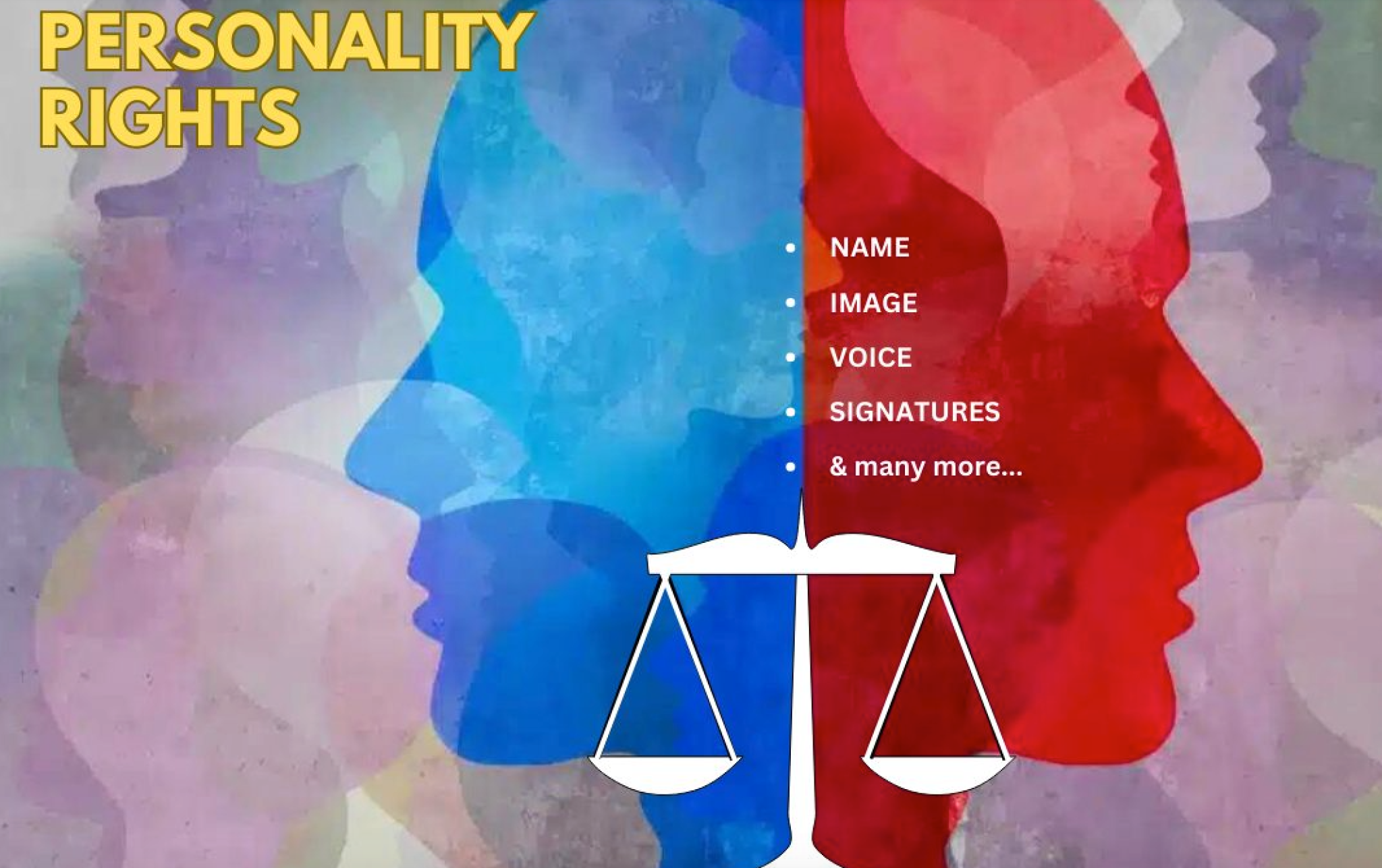
- 23 May 2024
Why is it in the News?
Hollywood actress Scarlett Johansson has said she was “shocked” and “angered” to hear the voice of GPT-4o, OpenAI’s latest AI model, as it sounded “eerily similar” to her own voice.
What are Personality Rights?
- Personality rights or publicity rights are a subset of “celebrity rights” – a much broader term used to refer to certain rights enjoyed by celebrities.
- Besides personality rights, celebrities also have “privacy rights”, which include the right to be left alone.
- The name, voice, signature, images, or any other feature easily identified by the public are markers of a celebrity’s personality and are referred to as “personality rights.”
- These could include poses, mannerisms, or any other distinct aspect of their public persona.
- Several celebrities register aspects of their personalities as trademarks to use them commercially.
- For instance, footballer Gareth Bale trademarked the heart shape he makes with his hands as part of goal celebrations.
- The rationale behind such rights is that only the creator or owner of the unique features can gain commercial benefit from them.
- Therefore, unauthorised use could lead to revenue losses.
- In India, actors such as Rajnikanth, Anil Kapoor and Jackie Shroff have approached the courts over “personality rights” in India.
- Recently, the Delhi HC protected the personality and publicity rights of actor Jackie Shroff while restraining various e-commerce stores, AI chatbots, and social media from misusing Shroff’s name, image, voice, and likeness without his consent.
How are Personality Rights Protected in India?
- Although personality rights or their protection are not explicitly defined in Indian statutes, they usually fall under the right(s) to privacy and property.
- Concepts in intellectual property rights cases, such as passing off and deception, are usually applied in such cases while ascertaining if protection is warranted.
- Protection can be given through damages and injunctions.
International Criminal Court (ICC)
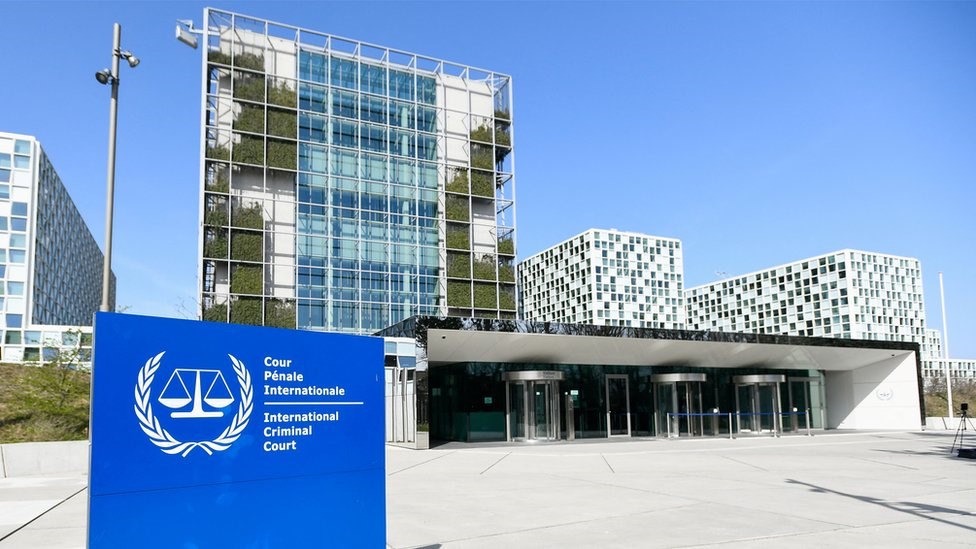
- 21 May 2024
Why is it in the News?
International Criminal Court (ICC) Chief Prosecutor recently announced that he has applied for arrest warrants against Israeli Prime Minister Benjamin Netanyahu and Defence Minister Yoav Gallant for crimes against humanity in the ongoing Gaza war.
What is the International Criminal Court (ICC)?
- The International Criminal Court (ICC) in The Hague (Netherlands) is a permanent global court established in 2002.
- The ICC was created as a result of the Rome Statute, a treaty established at a United Nations conference in Italy and signed in 1998 by 120 countries — giving the ICC its power.
- The ICC is independent of the United Nations (UN) but is endorsed by the UN General Assembly.
- It also maintains a cooperation agreement with the UN.
- It has the power to prosecute individuals and leaders for genocide, crimes against humanity and war crimes.
- Unlike the International Court of Justice (ICJ), which is an organ of the UN, the ICC does not prosecute states.
The Court does not have universal jurisdiction:
- Its jurisdiction only applies to crimes committed by nationals of States Parties or Non-States Parties that have recognized its jurisdiction through declaration and crimes committed in such States.
- The Court may also exercise its jurisdiction for crimes that have been referred to it by the United Nations Security Council, in accordance with a resolution adopted under Chapter VII of the Charter of the United Nations.
The Court’s jurisdiction is governed by the principle of complementarity:
- It does not relieve States of their primary responsibility and only intervenes when the States have been unable or did not wish, to try crimes under their jurisdiction.
- The Court is not a United Nations body. However, it is part of the international system to fight against impunity and prevent and handle crises.
How is the ICC governed?
- The Rome Statute created three bodies:
- The International Criminal Court
- The Assembly of States Parties
- The Trust Fund for Victims
- The Assembly of States Parties (ASP) is made up of representatives of States Parties.
- It provides general guidelines while respecting the independence of the Court and makes decisions relating to how it operates (in particular by electing judges and the Prosecutor and by approving the ICC’s budget).
- The Trust Fund for Victims was created by the ASP to grant individual reparations to victims by executing reparations orders handed down by the Court.
- It also contributes to their rehabilitation through psychological and physical recovery and material support.
- The Fund has financed projects in Uganda, the Central African Republic and the Democratic Republic of the Congo.
The International Criminal Court is made up of four bodies:
- The Presidency (made up of three judges) is responsible for external relations with States, organizes the Divisions’ judicial work and supervises the administrative work of the Registry;
- The Judicial Divisions – the Pre-Trial Division, the Trial Division and the Appeals Division – carry out judicial proceedings;
- The Office of the Prosecutor carries out preliminary analyses, investigations and prosecutions;
- The Registry carries out non-judicial activities related to safety, interpretation, information and outreach or support to lawyers for the defence and victims.
The recruitment process for judges at the ICC:
- Every three years, the ASP elects six new judges, a third of the 18 ICC judges, for a term of nine years.
- The candidates for the position of judge at the ICC are presented by the States Parties.
- The election of judges is governed by a unique procedure that aims to ensure, insofar as possible, that there is a balanced bench with regard to legal expertise, geographical representation and gender.
How does the International Criminal Court differ from the International Court of Justice?
International Criminal Court:
1. Part of the United Nations (UN)?
Ans. No, The International Criminal Court is independent but co-operates closely with the UN.
2. What is its aim?
Ans. To try individuals who are suspected of the crime of genocide, war crimes, crimes against humanity or the crime of aggression.
3. Where is it located?
Ans. The Hague
International Court of Justice:
1. Part of the United Nations (UN)?
Ans. No, The International Court of Justice is the principal judicial organ of the United Nations.
2. What is its aim?
Ans. To settle legal disputes between states,and to advise the UN on legal questions.
3. Where is it located?
Ans. The Hague
AI Agents

- 22 May 2024
Why is it in the News?
Known as ‘AI agents’, GPT-4o and Project Astra have been touted as far superior to conventional voice assistants such as Alexa, Siri, and Google Assistant.
What are AI Agents?
- AI agents are sophisticated AI systems that can engage in real-time, multi-modal (text, image, or voice) interactions with humans.
- Unlike conventional language models, which solely work on text-based inputs and outputs, AI agents can process and respond to a wide variety of inputs including voice, images, and even input from their surroundings.
- AI agents are designed to perceive their environment and take actions in order to achieve specific goals.
- They perceive their environment through sensors, process the information using algorithms or models, and then take actions using actuators or other means.
- AI agents can range from simple systems that follow predefined rules to complex, autonomous entities that learn and adapt based on their experiences.
- They're utilized in various fields, including robotics, gaming, virtual assistants, autonomous vehicles, and more.
- These agents can be reactive (responding directly to stimuli), deliberative (planning and making decisions), or even have learning capabilities (adapting their behaviour based on data and experiences).
How are they Different From Large Language Models?
- While large language models (LLMs) like GPT-3 and GPT-4 have the ability only to generate human-like text, AI agents make interactions more natural and immersive with the help of voice, vision, and environmental sensors.
- Unlike LLMs, AI agents are designed for instantaneous, real-time conversations with responses much similar to humans.
- LLMs lack contextual awareness, while AI agents can understand and learn from the context of interactions, allowing them to provide more relevant and personalised responses.
- Also, language models do not have any autonomy since they only generate text output.
- AI agents, however, can perform complex tasks autonomously such as coding, data analysis, etc.
- When integrated with robotic systems, AI agents can even perform physical actions.
What are the Potential Uses of AI Agents?
- AI agents can serve as intelligent and highly capable assistants.
- They are capable of handling an array of tasks, from offering personalised recommendations to scheduling appointments.
- AI agents can be ideal for customer service as they can offer seamless natural interactions, and resolve queries instantly without actually the need for human interventions.
- In the field of education and training, AI agents can act as personal tutors, customise themselves based on a student’s learning styles, and may even offer a tailored set of instructions.
- In healthcare, they could assist medical professionals by providing real-time analysis, diagnostic support, and even monitoring patients.
Risks and Challenges Associated With AI Agents:
- While AI agents showcase immense potential for the future, they are not without risks.
- Privacy and security are a key area of concern as AI agents gain access to more personal data and environmental information.
- Just like any AI model, AI agents can carry forward biases from their training data or algorithms, leading to harmful outcomes.
As these systems become more common, appropriate regulations and governance frameworks should be laid out to ensure their responsible deployment.
Doppler Radar Speed Guns

- 22 May 2024
Why is it in the News?
The Consumer Affairs Ministry has invited public comments by June 11 on draft rules for microwave Doppler radar equipment used to measure vehicle speeds on roads, according to a circular issued by the ministry.
What are Doppler Radar Speed Guns?
- Doppler radar speed guns are tools that use the Doppler effect to measure the speed of moving objects, such as vehicles.
- They consist of a radio transmitter and receiver that send out a narrow beam of radio waves.
- When these waves bounce off a moving object, their frequency changes due to the Doppler effect.
- This phenomenon occurs when the frequency of a wave changes as its source moves relative to an observer.
The Doppler Effect
- The Doppler effect refers to the change in frequency or wavelength of a wave in relation to an observer moving relative to the wave source.
- In the case of a radar speed gun, the waves in question are radio waves.
How do Doppler Radar Speed Guns work?
- As the object moves toward or away from the radar gun, the frequency of the reflected waves is altered.
- If the object is approaching the radar, the frequency increases
- If it's moving away, the frequency decreases
- The radar speed gun analyzes these changes to calculate the object's speed using the following equation:
- v = Δf/f × c/2
- where v is the object's speed, Δf is the frequency shift, f is the transmitted frequency, and c is the speed of light.
- Doppler radar speed guns are commonly used by law enforcement to monitor vehicle speeds, ensuring safety on the roads.
- They can also be found in various other applications, such as aviation, navigation, and meteorology.
Advantages
- Non-Contact Measurement: Measures speed without needing to be in contact with the vehicle.
- Quick and Accurate: Provides rapid speed measurements with high accuracy.
- Versatile: Can be used in various conditions and for different types of moving objects.
Census Begins for Blue Sheep and Himalayan ibex
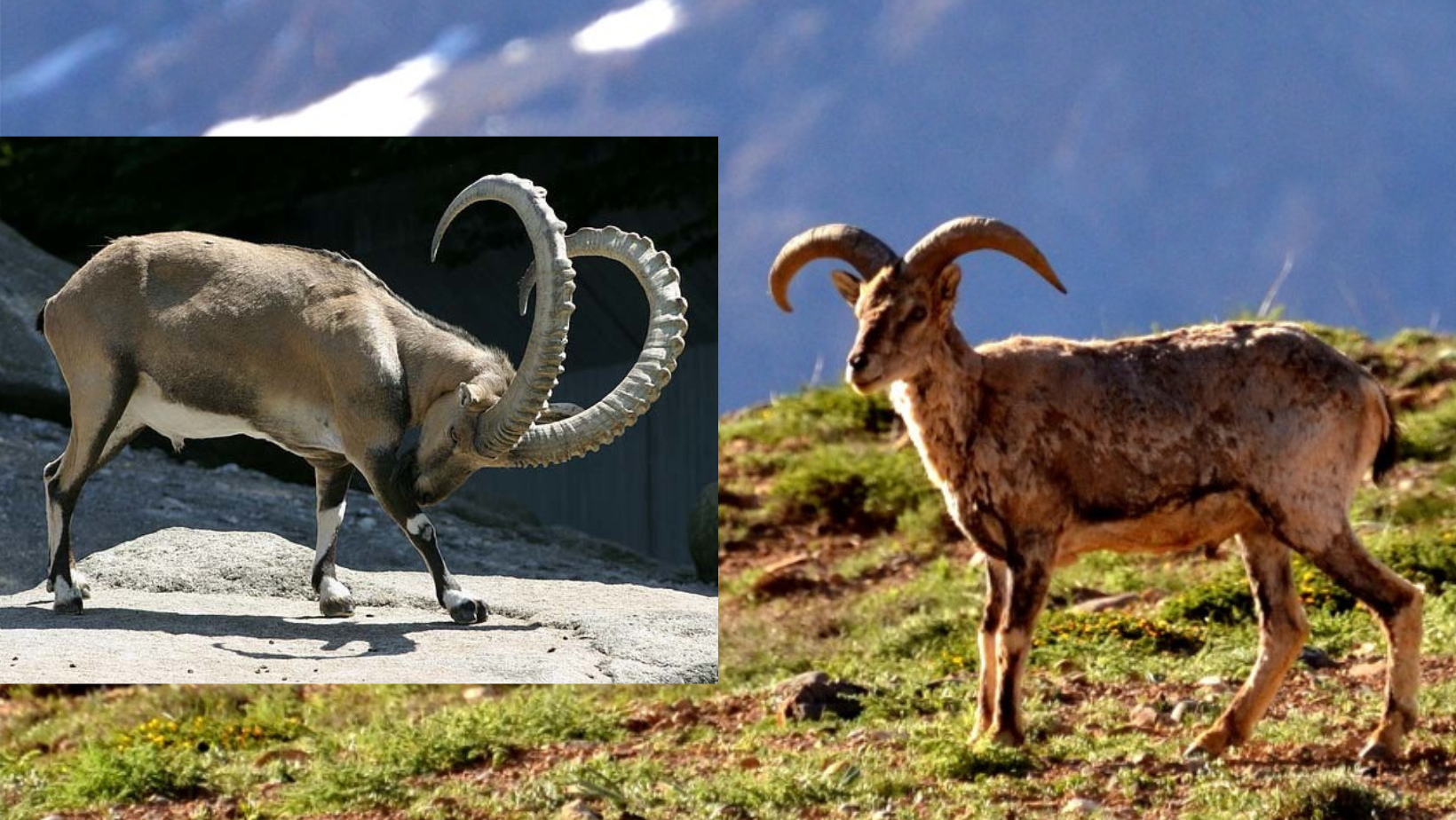
- 22 May 2024
Why is it in the News?
Wildlife authorities in Himachal Pradesh’s high altitude, cold desert district of Lahaul & Spiti have started surveys as part of the census to estimate the population of blue sheep or bharal and the Himalayan ibex, the main prey of the iconic snow leopard.
About Himalayan Ibex:
- The Himalayan ibex, a subspecies of the Siberian ibex, is native to the Himalayan regions of India, Pakistan, Tibet, and Nepal.
- These sure-footed, sturdy wild goats belong to the genus Capra in the family Bovidae and are typically found in mountainous regions across Europe, Asia, and northeastern Africa.
- Scientific Name: Capra sibirica hemalayanus
- Habitat: Himalayan ibex inhabit the high-altitude regions of the Himalayas, including the Trans-Himalayan areas, at elevations between 3,000 and 5,800 meters.
- In India, they are primarily found in the states of Jammu and Kashmir, Himachal Pradesh, and Uttarakhand.
Features:
- Size: Adult Himalayan ibex weighs about 90 kg and stands around 40 inches tall.
- Sexual Dimorphism: Males are larger than females and have large, curved horns with front notches that grow each year.
- Coat: Their coat varies from light brown to reddish-brown with a white belly and distinctive black and white markings on their legs.
- The coat is thick and woolly in winter, shedding in early summer. A darker dorsal stripe is also present.
- Behaviour: They are typically found in small herds, sometimes numbering up to 50 individuals.
- They are agile and can run at speeds of up to 50 km/h.
Conservation Status:
- IUCN Red List: Near Threatened
About Blue Sheep/Bharal:
- The blue sheep, also known as the bharal, is a caprine species native to the high Himalayas.
- Its scientific name is Pseudois nayaur, and it is the sole member of the genus Pseudois.
Distribution:
- The bharal is found in several countries, including India, Bhutan, China (specifically in Gansu, Ningxia, Sichuan, Tibet, and Inner Mongolia), Myanmar, Nepal, and Pakistan.
Features:
- Size: Medium-sized caprids, measuring 115 to 165 cm (45 to 65 in) in length, with tails ranging from 10 to 20 cm (3.9 to 7.9 in).
- They stand 69 to 91 cm (27 to 36 in) at the shoulder.
- Sexual Dimorphism: Males are slightly larger than females.
- Coat: Their short, dense coat is slate grey, often with a bluish shine. The underparts and backs of the legs are white, while the chest and fronts of the legs are black.
- Horns: The horns grow upwards, curve out, and then back, resembling an upside-down arc.
- Behaviour: Bharal are diurnal, alternating between feeding and resting on grassy mountain slopes.
Conservation Status:
- IUCN Red List: Least Concern
- Wildlife Protection Act 1972: Schedule ICoat: Their short, dense coat is slate grey, often with a bluish shine. The underparts and backs of the legs are white, while the chest and fronts of the legs are black.
- Horns: The horns grow upwards, curve out, and then back, resembling an upside-down arc.
- Behaviour: Bharal are diurnal, alternating between feeding and resting on grassy mountain slopes.
Conservation Status:
- IUCN Red List: Least Concern
- Wildlife Protection Act 1972: Schedule I
Aircraft Turbulence
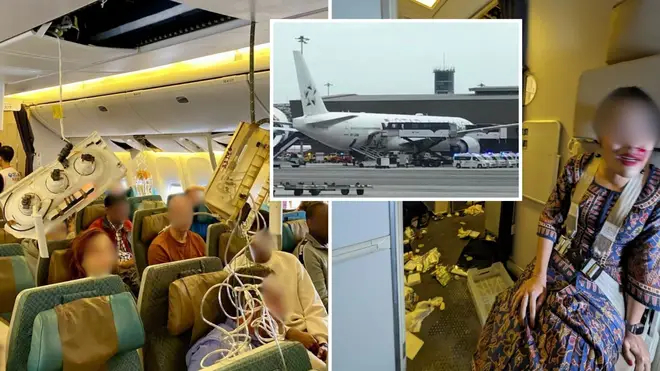
- 22 May 2024
Why is it in the News?
A passenger died and many were injured when a Singapore Airlines’ Boeing 777 headed from London to Singapore “severe turbulence” en route.
What is the Aircraft Turbulence
- Turbulence means disruption of airflow over the wings of an aeroplane, which causes it to enter irregular vertical motion.
- These pockets of disturbed air can have many causes, most obviously the unstable weather patterns that trigger storms.
- It is caused by the relative movement of disturbed air through which an aircraft is flying.
There are at least seven kinds of turbulence that an aircraft can run into:
- Wind Shear: It happens when there is a sudden change in wind direction, whether vertically or horizontally.
- Typically occurs close to thunderstorms, jet streams, etc.; tricky for pilots as tailwinds suddenly change to headwinds or vice versa.
- Frontal: Created in the frontal zone when warm air is lifted by a sloping frontal surface and friction between opposing air masses.
- Most palpable when warm air is moist; intensity increases with thunderstorms. Most commonly close to thunderstorms.
- Convective: When land surface temperature rises, the air above the ground heats up and rises, creating air pockets around it.
- Convection currents cause difficulties during approach as they tend to affect the rate of descent.
- Wake: It forms behind an aircraft when it flies through air-creating wingtip vortices.
- Mechanical: This type of turbulence occurs when tall solid objects such as mountains or highrise constructions disrupt the normal airflow, causing the air for planes to fly through to become dirty.
- Clear Air: It occurs when an aircraft crosses from one air mass to another, which has a different direction.
- Clear air turbulence could also happen when an aircraft moves out of a jet stream. Clear air turbulence is mainly caused by wind or jet streams.
- Mountain View: It is one of the most severe; these are oscillations that form on the downwind side of mountains when strong winds flow towards mountains in a perpendicular fashion.
- Aircraft tracking perpendicularly across, or downwind of a mountain, may experience a sudden loss of altitude followed by a sudden reduction in airspeed.
Are turbulence incidents dangerous?
- It depends on their nature and intensity.
- Aircraft undergo some form of turbulence on a regular basis and pilots are trained to deal with these.
- However, there have been several instances when turbulence has brought down modern jetliners.
Even in these cases, while intense turbulence has been the main cause of an accident, several other factors — such as lack of proper training, and poor dissemination of weather or wind-related information — have contributed to the accident.
Paris Principles on NHRIs
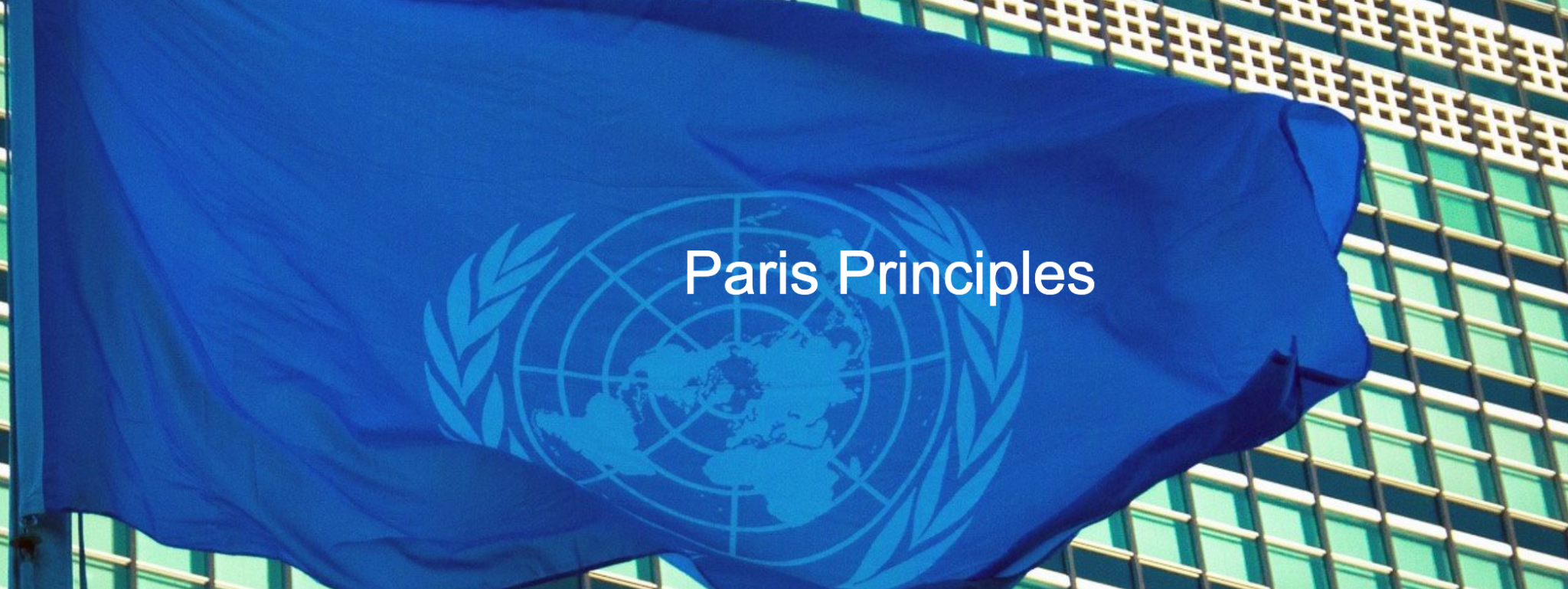
- 21 May 2024
Why is it in the News?
For the second year in a row, an organisation affiliated with the UN human rights office has deferred accreditation for India’s human rights body, the National Human Rights Commission (NHRC).
What are the Paris Principles?
- The Paris Principles, formally Principles Relating to the Status of National Human Rights Institutions, which were adopted by the UN General Assembly on December 20, 1993, set out minimum standards that NHRIs must meet in order to be considered credible and to operate effectively.
- The Paris Principles lay down six main criteria to determine which NHRIs are functioning effectively and would receive accreditation from GANHRI.
- They are
- broad mandate based on universal human rights norms and standards
- autonomy from the government
- independence guaranteed by the statute or Constitution
- pluralism, including membership that broadly reflects their society
- adequate resources and
- adequate powers of investigation
- These Principles also say that NHRIs should be equipped to receive complaints and cases brought by individuals, third parties, NGOs, trade unions, or other organisations representative of professionals such as lawyers and journalists.
Accreditation:
- Global Alliance of National Human Rights Institutions (GANHRI), which represents about 120 national human rights institutions, is responsible for reviewing and accrediting these institutions in compliance with the Paris Principles every five years.
- GANHRI acts through its Subcommittee on Accreditation (SCA), which categorises member NHRIs into two groups, ‘A’ and ‘B’. As of November 29, 2023, 120 NHRIs were accredited by GANHRI, 88 of which were given an ‘A’ rank, indicating full compliance with the Paris Principles; the remaining 32 were put under ‘B’, indicating partial compliance.
Why has India’s Accreditation Been Put on Hold?
- India’s accreditation status was put on hold after the Sub-Committee on Accreditation (SCA) meeting on May 1 in Geneva.
- The SCA, which meets twice a year, scrutinizes each country’s human rights institution.
- The May 1 meeting, chaired by New Zealand with participation from South Africa, Sri Lanka, and Spain, highlighted several concerns about the National Human Rights Commission (NHRC) of India.
- Issues raised include a lack of transparency in NHRC appointments, conflicts of interest with police overseeing investigations, and no minority or female representation on the panel.
- Additionally, nine human rights organizations, including Amnesty International and Human Rights Watch, expressed concerns about India’s human rights record, citing increasing restrictions on civic space and discrimination against minorities.
- UN human rights experts also highlighted “attacks on minorities, media, and civil society” in India.
What Happens if India Loses Accreditation?
- If India loses its 'A' status accreditation, its National Human Rights Institution (NHRI) will face significant limitations. With 'A' status, NHRIs can participate in the UN Human Rights Council, its subsidiary bodies, and some UNGA bodies and mechanisms, and hold full membership in the Global Alliance of National Human Rights Institutions (GANHRI) with voting and governance rights.
- With 'B' status, NHRIs can attend GANHRI meetings but cannot vote or hold governance positions. Without proper accreditation, India’s NHRC cannot represent the country at the UN Human Rights Council, vote, or hold governance roles.
- India’s review has been deferred, and a final decision is yet to be made.
What is India’s Record of Accreditation with GANHRI?
- India’s National Human Rights Commission (NHRC) was established in 1993 and first accredited by the Global Alliance of National Human Rights Institutions (GANHRI) in 1999.
- It achieved 'A' status in 2006 and retained it in 2011.
- However, in 2016, accreditation was deferred due to issues like the appointment of political representatives and lack of gender balance and pluralism in the NHRC staff.
- Despite these concerns, the NHRC regained 'A' status in 2017.
- In 2023, the Sub-Committee on Accreditation (SCA) withheld India’s accreditation again, citing six reasons, including the NHRC’s inability to operate without government interference and the presence of too many government officials and individuals affiliated with the ruling party in the commission.
Rangelands in India
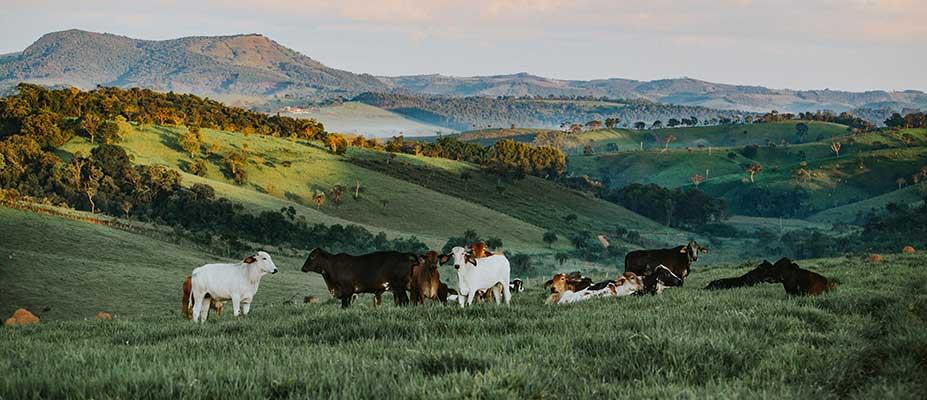
- 21 May 2024
Why is it in the News?
A new report by the United Nations paints a concerning picture of the world’s rangelands, with up to 50 per cent estimated to be degraded.
What are Rangelands?
- A rangeland is an open area that is suitable for grazing livestock.
- Rangelands are home to grass and grass-like plants, shrubs, and scattered trees.
- They are, however, unfit for growing crops due to their aridity and poor soil quality.
- Rangelands cover 80 million square kilometres, or over 54 per cent of the terrestrial surface, constituting the largest land cover/use type in the world but accounting for one-sixth of global food production and representing nearly one-third of the planet’s carbon reservoir.
- According to the Rangelands Atlas, livestock production systems in rangelands cover 45 per cent of the global land surface, almost half of which is situated in drylands.
- In India, rangelands occupy about 121 million hectares and the area used for grazing is estimated at around 40 per cent of the total land surface of India, including grasslands (17 per cent), and forests (23 per cent).
Key Characteristics of Rangelands in India:
- Vegetation: Rangelands in India is primarily covered with grasses and shrubs, such as Dichanthium annulatum (gamhar), Cenchrus ciliaris (buffel grass), and Ziziphus nummularia (ber).
- The presence and type of vegetation vary based on rainfall and soil conditions, with trees being scattered or sometimes entirely absent.
- Climate: These areas experience semi-arid to arid climates with significant seasonal variations in rainfall.
- Droughts are a frequent challenge.
- Soil: Rangeland soils are typically thin and less fertile than those found in agricultural areas.
- Land Use: Rangelands are mainly used for grazing by domestic animals like cattle, sheep, and goats.
- Some of these lands also support wildlife herbivores.
The Significance and Management of Rangelands in India:
- Rangelands play a pivotal role in India's ecosystem, serving as primary grazing areas for livestock, maintaining biodiversity, and providing ecological services such as soil erosion prevention, water flow regulation, and carbon storage.
- These lands are also a crucial source of livelihood for millions through pastoralism, dairy production, and wool production.
- However, rangelands face multiple challenges, including overgrazing, climate change, and encroachment, which negatively impact their health and productivity.
- To address these issues, several management strategies have been employed:
- Rotational Grazing: This approach allows for controlled grazing periods, enabling vegetation to recover and promoting long-term sustainability.
- Reseeding: By reintroducing native grasses and shrubs, the quality of rangelands can be significantly enhanced.
- Community-Based Management: Engaging local communities in the decision-making process fosters sustainable practices and ensures the well-being of both the rangelands and the people relying on them.
- Understanding the significance of rangelands in India is essential for maintaining their vitality, supporting the livelihoods of those dependent on them, and ensuring the continued provision of vital ecological services.
Primary Amoebic Meningoencephalitis (PAM)
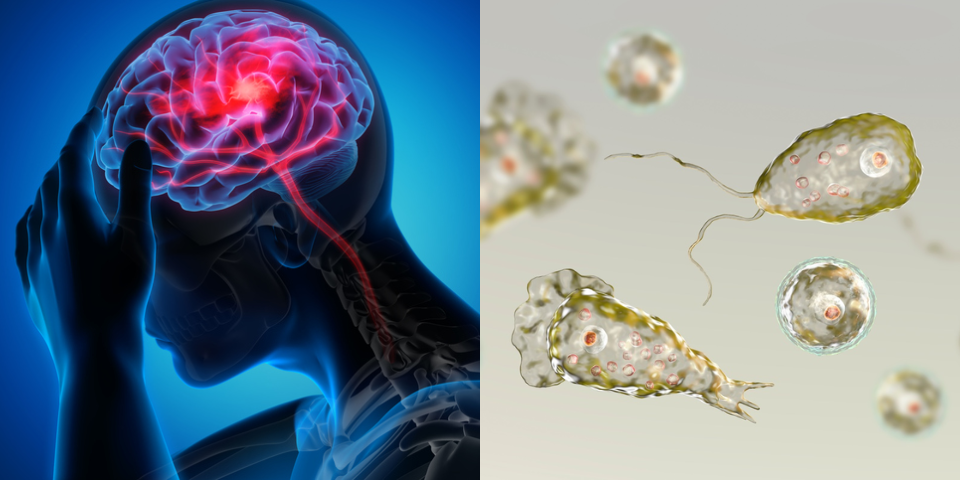
- 21 May 2024
Why is it in the News?
A five-year-old girl from Malappuram district in Kerala who had been undergoing treatment for amoebic meningoencephalitis at the Government Medical College Hospital Kozhikode has died.
What is the Primary Amoebic Meningoencephalitis?
- Primary amebic meningoencephalitis (PAM) is a rare brain infection that is caused by Naegleria fowleri.
- It is a free-living amoeba or a single-celled living organism.
- Naegleria fowleri lives in warm fresh water and soil around the world and infects people when it enters the body through the nose.
- Higher temperatures of up to 115°F (46°C) are conducive to its growth and it can survive for short periods in warm environments.
- The amoeba can be found in warm freshwater, such as lakes and rivers, swimming pools, splash pads, surf parks, or other recreational venues that are poorly maintained or minimally chlorinated.
How does Naegleria fowleri infect people?
- Naegleria fowleri enters the body through the nose, usually when people are swimming. It then travels up to the brain, where it destroys the brain tissue and causes swelling.
- Notably, people cannot get infected with Naegleria fowleri from drinking water contaminated with the amoeba.
- PAM is also non-communicable.
Symptoms of PAM:
- In the initial stage, the symptoms include headache, fever, nausea and vomiting.
- Later on, the patient may have a stiff neck and experience confusion, seizures, hallucinations and slip into a state of coma.
- According to the US Centers for Disease Control and Prevention (CDC), “Most people with PAM die within 1 to 18 days after symptoms begin.
- It usually leads to coma and death after 5 days.”
What is the treatment for primary amoebic meningoencephalitis?
- As earlier reported, scientists haven’t been able to identify any effective treatments for the disease yet.
- At present, doctors treat it with a combination of drugs, including amphotericin B, azithromycin, fluconazole, rifampin, miltefosine, and dexamethasone.
Copernicus Emergency Management Service (CEMS) Programme
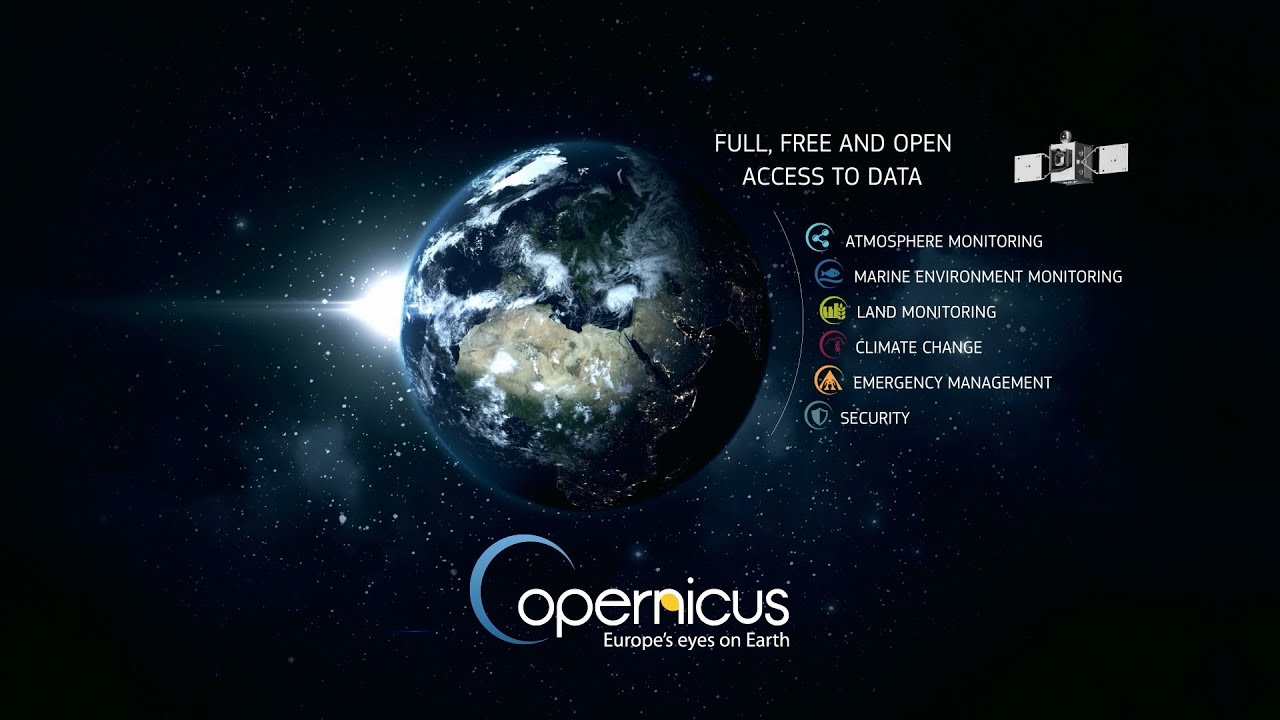
- 21 May 2024
Why is it in the News?
As part of a multi-agency effort to locate a helicopter carrying Iranian President Ebrahim Raisi that crashed in East Azerbaijan province recently, the European Union activated its emergency satellite mapping service at Iran’s request as adverse weather and darkness hampered search and rescue operations.
What is the Copernicus Emergency Management Service (CEMS)?
- The Copernicus Emergency Management Service (CEMS) is part of the Copernicus Programme, the European Union’s Earth Observation Programme.
- CEMS is managed directly by the European Commission via the Joint Research Centre.
- CEMS supports all actors involved in the management of natural or manmade disasters by providing geospatial data and images for informed decision-making.
- CEMS constantly monitors Europe and the globe for signals of an impending disaster or evidence of one happening in real-time.
- The service immediately notifies national authorities of their findings or can be activated on-demand and offers to provide them with maps, time series or other relevant information to better manage disaster risk.
- CEMS products are created using satellite, in-situ (non-space) and model data.
- CEMS comprises two components:
- On-demand Mapping
- Early Warning & Monitoring
- Copernicus EMS Early Warning and Monitoring offers critical geospatial information at European and global levels through continuous observations and forecasts for floods, droughts and forest fires.
- It includes the European Flood Awareness System (EFAS), the European Forest Fire Information System (EFFIS) and the European Drought Observatory (EDO).
- It also links to the global versions of the early warning systems and the Global Disaster Alert and Coordination System (GDACS) for tropical cyclones.
- These versions cover the overseas areas of Europe that are often affected by extreme events.
- The service is provided free of charge to all users either in rush mode, for emergency management activities that require immediate response and/or non-rush mode, to support emergency disaster management activities not related to immediate response, analysing pre-disaster risk assessment and population and asset vulnerability or post-disaster recovery and reconstruction.
- It can be activated only by designated authorised users.
R21/Matrix-M Vaccine
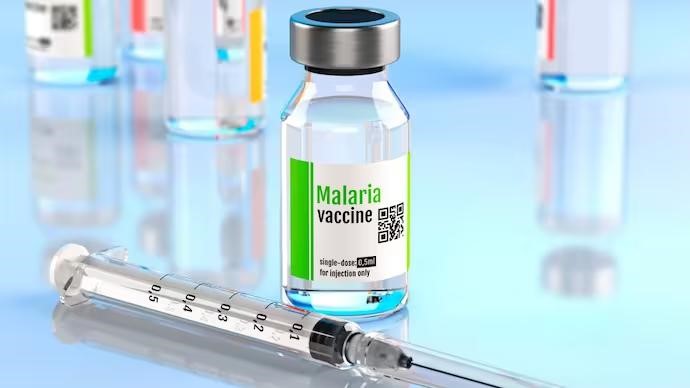
- 21 May 2024
Why is it in the News?
Vaccines manufacturer Serum Institute of India (SII) recently said it has started exports of the 'R21/Matrix-M' malaria vaccine to Africa as part of the global fight against the disease.
What is R21/Matrix-M Vaccine?
- The R21/Matrix-M vaccine is a newly approved preventive measure against malaria in children, marking the second malaria vaccine recommended by the World Health Organization (WHO) after the RTS, S/AS01 vaccine in 2021.
- Developed by the Jenner Institute at Oxford University and the Serum Institute of India, the vaccine received support from the European and Developing Countries Clinical Trials Partnership (EDCTP), the Wellcome Trust, and the European Investment Bank (EIB).
- This low-cost, high-efficacy vaccine is already licensed in several African countries.
How the R21/Matrix-M Vaccine Works?
- Vaccines work by presenting an antigen—a component of the virus or bacteria that the immune system can recognize and respond to—to immune cells.
- The R21/Matrix-M vaccine targets the plasmodium 'sporozoite', the initial form of the malaria parasite entering the human body.
- Infected mosquitoes inject only a few sporozoites (10-100) before the parasite multiplies, making them an ideal target for a vaccine.
- R21 is a subunit vaccine that delivers parts of a protein secreted by the sporozoite, combined with a component of the hepatitis B virus known to trigger a strong immune response.
- Additionally, the vaccine contains Matrix-M, an "adjuvant" that enhances the immune system’s response, making it more potent and long-lasting.
Key Facts about Malaria:
- Malaria is a life-threatening disease caused by parasites that are transmitted to people through the bites of infected female Anopheles mosquitoes.
- There are five parasite species that cause malaria in humans, with Plasmodium falciparum and Plasmodium vivax posing the greatest threat.
- Malaria is prevalent in tropical areas where it’s hot and humid.
- In 2020, there were an estimated 241 million malaria cases worldwide, resulting in approximately 627,000 deaths. Sub-Saharan Africa bears the heaviest burden, accounting for about 95% of malaria cases and 96% of deaths, primarily among children under five.
- Children under 5 years of age are the most vulnerable group affected by malaria.
- Symptoms include fever, chills, headache, nausea, and muscle pain, which can progress to severe illness and death if untreated.
- Cerebral malaria, the most severe form, can lead to coma and represents about 15% of deaths in children and nearly 20% of adult deaths.
- Malaria is preventable and curable; early treatment often results in full recovery.
- Treatment involves various antimalarial drugs, including chloroquine, hydroxychloroquine, primaquine, artemisinin-based therapy, and atovaquone-proguanil.
- The type of parasite determines the specific medication used.
- Continued efforts are essential to control and ultimately eradicate malaria, with vaccines like RTS, S/AS01 (Mosquirix) and R21/Matrix-M offering promising advances in prevention, especially for children in high-risk regions.
Contaminated Blood Scandal
- 20 May 2024
Why is it in the News?
An independent inquiry report on the UK’s contaminated blood scandal, to be published Monday (May 20), indicates Britain may pay over 10 billion pounds ($12.70 billion) in compensation to thousands infected with HIV or hepatitis.
What is the Contaminated Blood Scandal?
- During the 1970s and 1980s, thousands of people who had the blood-clotting disorder haemophilia were given blood donated or sold by people who were infected with the HIV virus and hepatitis.
- Tainted blood was also given to people who needed blood transfusions after childbirth or surgery.
- In the early 1970s, the NHS (Britain’s National Health Service) started using a new treatment for haemophilia called Factor VIII.
- This was a processed pharmaceutical product that was created by pooling plasma from many donors.
- Factor VIII was considered to be a “wonder drug” for patients with classical haemophilia and Von Willebrand Syndrome (which is a bleeding disorder in which the patient’s blood cannot clot fully), more efficient and convenient than earlier treatments.
- The nature of Factor VIII was such that even one infected donor could compromise the entire batch of the protein.
- The product used by the NHS was imported from the United States, where a large volume of donated plasma at the time came from prisoners and users of intravenous drugs who were paid for their blood.
- The inquiry report has estimated that more than 30,000 people were infected with HIV, hepatitis C or, as in the case of 1,250 haemophiliacs, both.
- Most hepatitis C infections were seen in transfusion recipients, and as many as 380 children were infected with HIV.
- Nearly two-thirds of those who were infected with HIV later died of AIDS-related illnesses, and an unknown number transferred HIV to their partners.
- The report said that 2,400-5,000 recipients of blood developed hepatitis C, with the exact figure not known yet, as symptoms can show up years later.
How did the government react after the scandal was widely known?
- It was only after 1985 that all Factor VIII products were heat-treated to kill the HIV virus.
- However, UK blood donations were not routinely screened for hepatitis C until 1991.
- Evidence provided to the inquiry suggests that the British government chose to turn a blind eye to the situation, mainly due to financial considerations.
- Official documents from the 1990s revealed that due to cost concerns, the NHS did not pursue adequate testing or awareness campaigns, despite warnings in the mid-1970s about the risks of viral infections from US blood donations.
- As early as 1953, the World Health Organisation (WHO), had warned of the hepatitis risks associated with the mass pooling of plasma products.
- It urged that dried plasma should be prepared from pools of between 10 to 20 donors to reduce the risk of contamination.
- In 1974, the UN agency warned Britain not to import blood from countries with a high prevalence of hepatitis, such as the US.
- Another warning of the risk of contracting HIV from blood products was issued in 1982.
- The following year, The Lancet and WHO said haemophiliacs should be told about the dangers of donated plasma.
Calcium Carbide
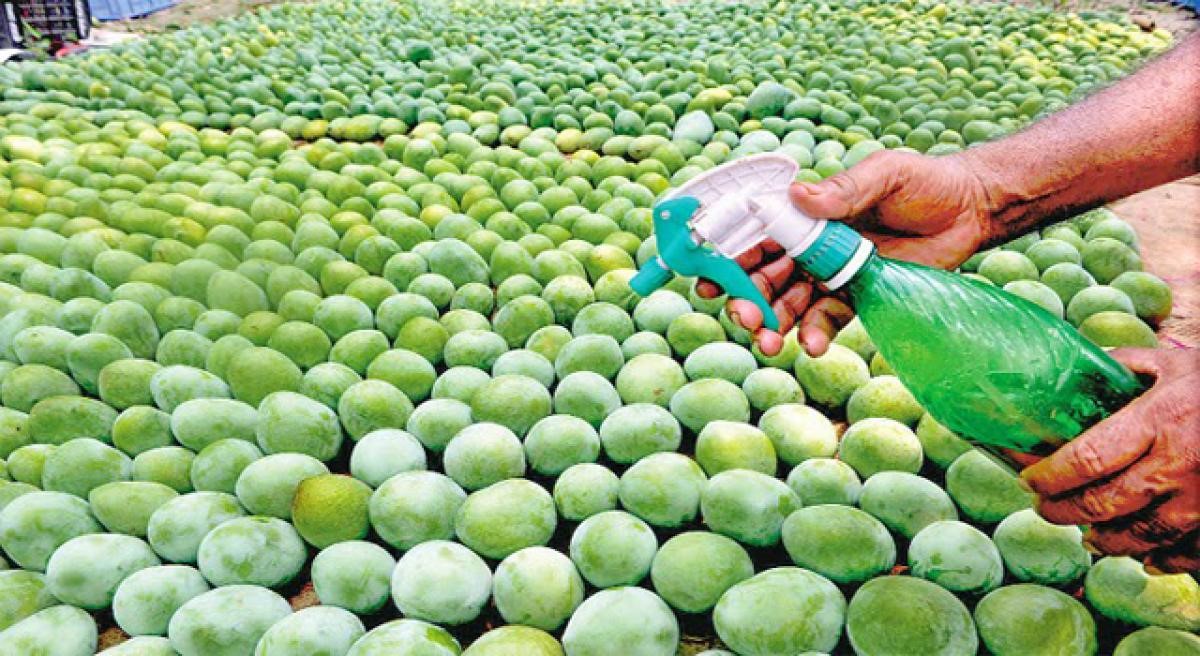
- 20 May 2024
Why is it in the News?
Food regulator FSSAI has asked traders and food business operators not to use the banned product 'calcium carbide' for ripening of fruits.
What is Calcium Carbide?
- Calcium carbide is a hazardous chemical that can have adverse effects on human health.
- It is a colourless, odourless substance that reacts with moisture to produce acetylene gas, which is a known carcinogen.
- This gas can cause respiratory problems, eye irritation, and even skin burns.
- In addition, calcium carbide also contains traces of arsenic and phosphorus, which are toxic substances that can lead to serious health complications.
- Calcium carbide is a commonly used chemical compound in the agriculture industry, especially for ripening fruits.
- It is a cheap and easily available substance that is widely used by fruit vendors and farmers in India to speed up the ripening process of fruits such as mangoes, bananas, and papayas.
- Due to these dangers, the use of calcium carbide for ripening fruits has been banned under the Regulation of the Food Safety and Standards (Prohibition and Restrictions on Sales) Regulations, 2011.
- This regulation explicitly states, "No person shall sell or offer or expose for sale or have in his premises for sale under any description, fruits which have been artificially ripened by use of acetylene gas, commonly known as carbide gas".
Ethylene gas as a safer alternative:
- Considering the issue of rampant use of banned calcium carbide, FSSAI has permitted the use of ethylene gas as a safer alternative for fruit ripening in India.
- Ethylene gas can be used at concentrations up to 100 ppm, depending upon the crop, variety and maturity.
- Ethylene, a naturally occurring hormone in fruits, regulates the ripening process by initiating and controlling a series of chemical and biochemical activities.
- The treatment of unripe fruits with ethylene gas triggers the natural ripening process until the fruit itself starts producing ethylene in substantial quantities.
- Further, the Central Insecticides Board and Registration Committee (CIB & RC) have approved Ethephon 39 per cent SL for the uniform ripening of mangoes and other fruits.
Nucleosynthesis
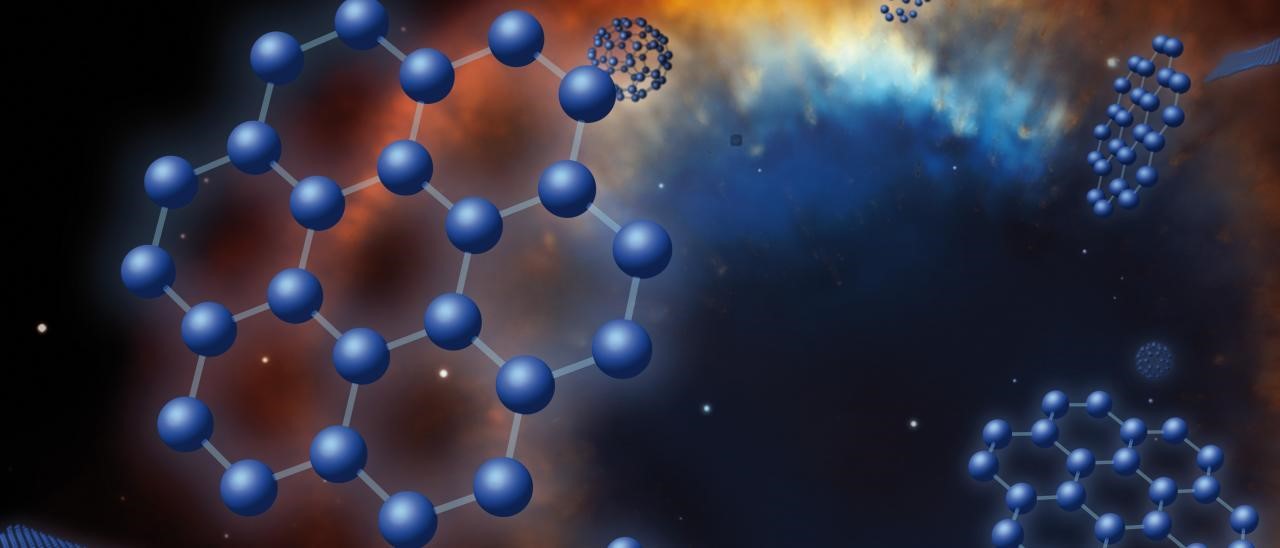
- 20 May 2024
Why is it in the News?
Stellar nucleosynthesis is the process by which stars forge elements inside their cores.
What is Nucleosynthesis?
- Nucleosynthesis is the process by which atomic nuclei undergo nuclear reactions and decay to form new nuclei.
- It is responsible for the production of new elements in the universe.
- Nucleosynthesis occurs in various environments, such as during the Big Bang, in the cores of stars through nuclear fusion, and in black hole accretion disks through nuclear burning.
- The process is temperature-dependent, and the rates of nuclear reactions are influenced by the temperature of the environment.
- The Big Bang Nucleosynthesis (BBN) model is a fundamental theory that explains the evolution of the early universe and predicts the abundance of light elements.
- Nucleosynthesis plays a crucial role in understanding the composition of the universe and can provide insights into physics beyond the standard model.
Types of nucleosynthesis:
- Nucleosynthesis occurs in several different environments and phases of the universe's evolution, including:
- Stellar Nucleosynthesis: This occurs within stars and is responsible for producing most of the chemical elements heavier than hydrogen and helium.
- As stars age and undergo various stages of nuclear fusion, they synthesize elements up to iron in their cores, and heavier elements during supernova explosions at the end of their life cycles.
- Big Bang Nucleosynthesis: This took place during the early moments of the universe's existence, shortly after the Big Bang.
- t primarily produced the lightest elements, hydrogen, and helium, along with trace amounts of lithium, beryllium, and boron.
- Cosmic Ray Spallation: High-energy cosmic rays interacting with interstellar matter can cause fragmentation of atomic nuclei, resulting in the production of lighter elements and isotopes.
Bacterial Pathogens Priority List (BPPL)
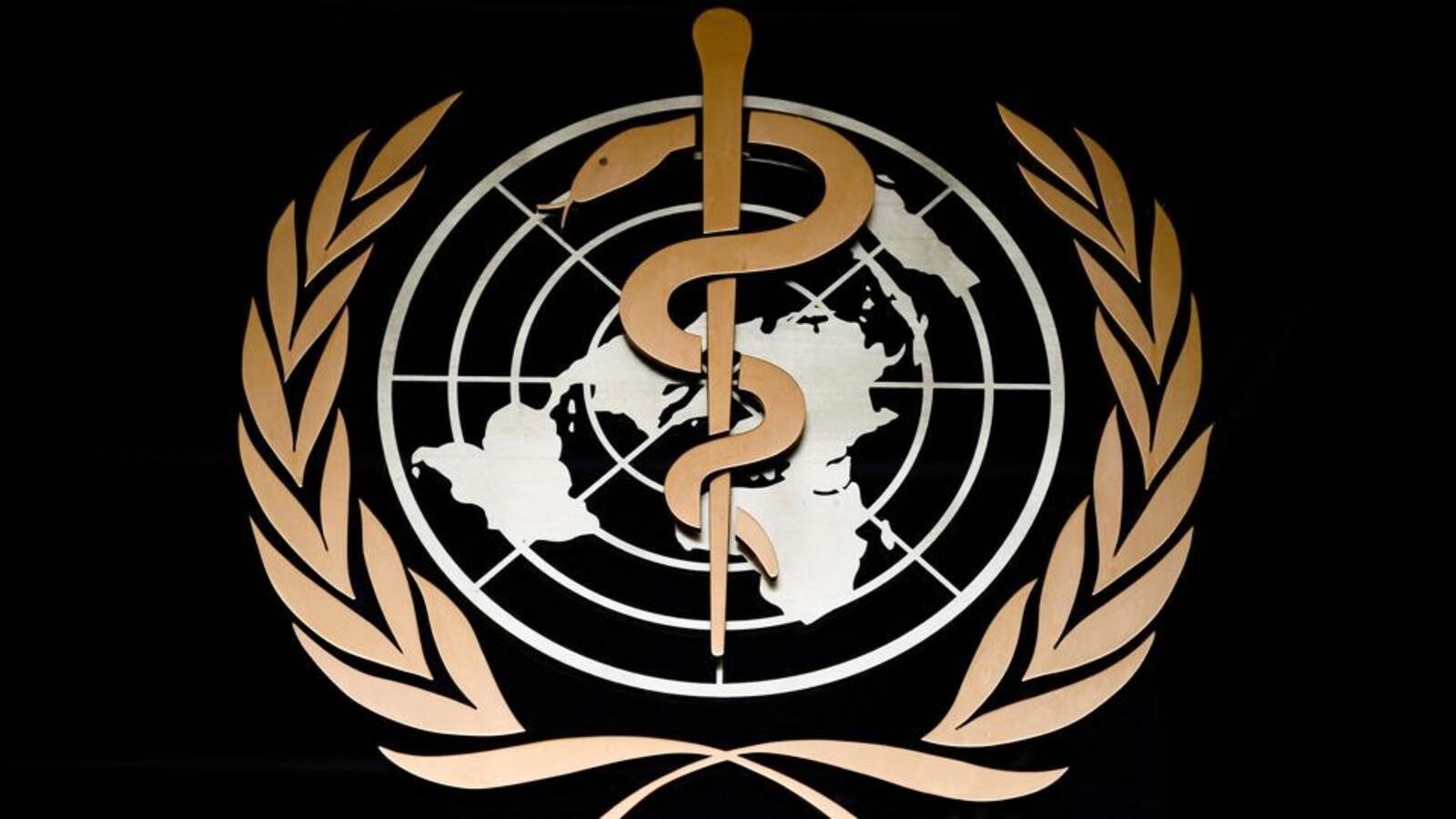
- 20 May 2024
Why is it in the News?
The World Health Organization (WHO) recently released its updated Bacterial Priority Pathogens List (BPPL) 2024.
What is the Bacterial Pathogens Priority List?
- The Bacterial Pathogens Priority List (BPPL) is a crucial tool in the global effort to combat antimicrobial resistance (AMR).
Background:
- In 2017, the World Health Organization (WHO) created the first BPPL to guide investment in the research and development (R&D) of new antibacterial treatments, listing 13 bacterial pathogens (phenotypes).
- The list was developed using the Multi-Criteria Decision Analysis (MCDA) method, a scientific approach that evaluates and ranks alternatives based on multiple criteria, ensuring systematic and transparent decision-making.
- The 2024 WHO BPPL expands to cover 24 pathogens across 15 families of antibiotic-resistant bacteria, categorizing them into critical, high, and medium priority groups to guide R&D and public health efforts.
Significance:
- The BPPL directs priorities for R&D and investment in AMR, highlighting the necessity for region-specific strategies to combat resistance effectively.
- It is aimed at developers of antibacterial medicines, academic and public research institutions, research funders, public-private partnerships involved in AMR R&D, and policymakers responsible for AMR policies and programs.
What is Antimicrobial Resistance (AMR)?
- Antimicrobial resistance (AMR) is the ability of microorganisms to persist or grow in the presence of drugs designed to inhibit or kill them.
- These drugs, called antimicrobials, are used to treat infectious diseases caused by microorganisms such as bacteria, fungi, viruses and protozoan parasites.
- When microorganisms become resistant to antimicrobials, standard treatments are often ineffective, and in some cases, no drugs provide effective therapy.
- Consequently, treatments fail and this increases illness and mortality in humans, animals and plants.
- For agriculture, this causes production losses, damages livelihoods and jeopardizes food security.
- Moreover, AMR can spread among different hosts and the environment, and antimicrobial-resistant microorganisms can contaminate the food chain.
- Antimicrobial resistance (AMR) is a major global threat of increasing concern to human and animal health.
- It also has implications for food safety, food security and the economic well-being of millions of farming households.
Project Astra
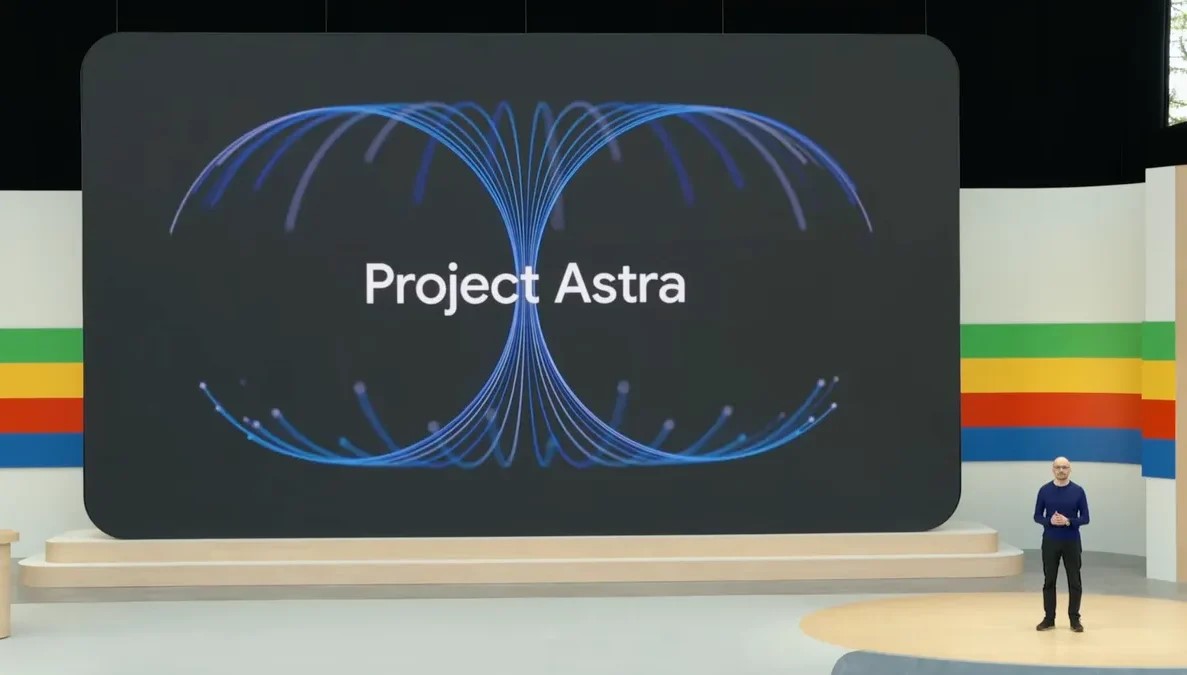
- 20 May 2024
Why is it in the News?
Recently, during the company's annual developer conference, Google unveiled an early version of Project Astra.
What is Project Astra?
- Project Astra is an experimental “multimodal” AI assistant developed by Google DeepMind.
- It's designed to be a versatile tool that can understand and respond to information from the real world through various means, like text, voice, images, and even videos.
- This makes it different from current AI assistants that mostly rely on internet searches and user input.
- Building on Google’s Gemini language model, Astra has multimodal capabilities to perceive visuals, sounds, and other real-world inputs.
- The aim is to create a universal AI helper that seamlessly assists us in daily life by comprehending the actual environment through sight and sound, not just text.
- Astra represents Google’s vision for next-gen AI assistants.
Key Features of Google's Project Astra:
- Visual Understanding: Astra can interpret and analyze visual input from its camera feed.
- It identifies objects, reads text, and describes scenes and environments in detail, allowing users to show Astra something and ask questions about it.
- Voice Interaction: Astra supports natural conversation without the need to repeatedly use wake words.
- It comprehends context and facilitates back-and-forth dialogue, even allowing users to interrupt its responses.
- Remembering Context: Astra retains memory of previous conversation parts, objects it has seen, and information provided by the user.
- This contextual awareness enhances the fluidity of interactions.
- Multimodal Integration: Astra integrates visual and auditory inputs to form a comprehensive understanding of the current situation, correlating what it sees and hears to fully grasp the context.
- Real-Time Assistance: Astra delivers real-time assistance by rapidly processing sensor data and queries, ensuring a responsive and interactive user experience.
What are Multimodal AI Models?
- Multimodal AI models are advanced artificial intelligence systems that process and integrate multiple types of data inputs, such as text, images, audio, and video, to develop a comprehensive understanding of context.
- By combining these different modalities, these models enhance their ability to interpret complex scenarios more accurately than unimodal systems.
- For instance, in autonomous vehicles, multimodal AI uses data from cameras, lidar, radar, and GPS for better navigation.
- In healthcare, these models integrate medical images with patient history for improved diagnostics.
- Applications also include virtual assistants, which understand and respond to spoken commands while recognizing objects in images, and educational tools that combine text, video, and interactive content for richer learning experiences.
- Multimodal AI models are often implemented using deep learning techniques, which allow the model to learn complex representations of the different data modalities and their interactions.
- As a result, these models can capture the rich, diverse information present in real-world scenarios, where data often comes in multiple forms.
Open Network for Digital Commerce (ONDC)
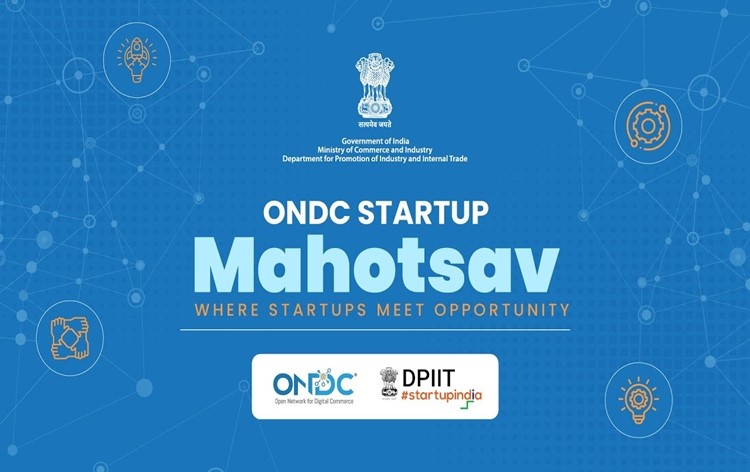
- 18 May 2024
Why is it in the News?
The ONDC Startup Mahotsav was held in New Delhi recently in collaboration between the Startup India initiative and the Open Network for Digital Commerce (ONDC).
About the Open Network for Digital Commerce (ONDC):
- The Open Network for Digital Commerce (ONDC) is a network based on open protocol and will enable local commerce across segments, such as mobility, grocery, food order and delivery, hotel booking and travel, among others, to be discovered and engaged by any network-enabled application.
- The platform aims to create new opportunities, curb digital monopolies support micro, small and medium enterprises and small traders and help them get on online platforms.
- It is an initiative of the Department for Promotion of Industry and Internal Trade (DPIIT) under the Ministry of Commerce and Industry.
Features of ONDC:
- ONDC, a UPI of e-commerce, seeks to democratise digital or electronic commerce, moving it from a platform-centric model to an open network.
- Through ONDC, merchants will be able to save their data to build credit history and reach consumers.
- The proposed government-backed platform aims to create a level playing field for e-commerce behemoths such as Amazon, Flipkart, and offline traders who have been crying foul at the unfair trade practices of these e-tailers.
- The platform will also be compliant with the Information Technology Act, 2000 and designed for compliance with the emerging Personal Data Protection Bill.
- In this system, ONDC plans to enable sellers and buyers to be digitally visible and transact through an open network, regardless of what platform or application they use.
- It will also empower merchants and consumers by breaking silos to form a single network to drive innovation and scale, transforming all businesses from retail goods, food to mobility.
- The new framework aims at promoting open networks developed on open-sourced methodology, using open specifications and open network protocols independent of any specific platform.
- It is expected to digitise the entire value chain, standardise operations, promote inclusion of suppliers, derive efficiencies in logistics and enhance value for consumers.
- According to the government's official statement, ONDC shall take all measures to ensure confidentiality and privacy of data in the network.
- ONDC shall not mandate the sharing of any transaction-level data by participants with ONDC.
- It will work with its participants to publish anonymised aggregate metrics on network performance without compromising on confidentiality and privacy.
- Presently, ONDC is in its pilot stage and the government has set up a nine-member advisory council, including Nandan Nilekani from Infosys and National Health Authority CEO R S Sharma, on measures needed to design and accelerate the adoption of ONDC.
Plunging Region of a Black Hole

- 18 May 2024
Why is it in the News?
For the first time, astronomers have observed the area right at the edge of a black hole where matter stops orbiting and plunges straight in at near-light speed.
What is the Plunging Region of a Black Hole?
- The plunging region of a black hole is an area where matter ceases to orbit the celestial object and instead falls directly into its incalculable depths.
- This phenomenon was initially predicted by Albert Einstein's groundbreaking theory of general relativity, which continues to shape our understanding of the cosmos.
- As matter approaches a black hole, it is torn apart and forms a rotating ring known as an accretion disc.
- According to general relativity, there exists an inner boundary within this disc, beyond which nothing can maintain its orbit around the black hole.
- Instead, the material is drawn towards the black hole at nearly the speed of light, marking the beginning of the plunging region.
- This region, situated just outside the event horizon, represents the point of no return for matter falling into a black hole.
- Despite the challenges posed by studying these enigmatic structures, researchers believe that investigating plunging regions could unveil new insights into the formation and evolution of black holes.
- Additionally, these studies may offer valuable information about the fundamental properties of space-time, potentially transforming our understanding of the universe and its most mysterious inhabitants.
What is a Black Hole?
- A black hole is a celestial phenomenon that arises from the remnants of a massive star that has exhausted its nuclear fuel and undergone gravitational collapse.
- It is characterized by an unfathomably dense core, known as a singularity, which is enveloped by a boundary called the event horizon.
- The event horizon serves as a point of no return; any matter or light that crosses this boundary is irrevocably drawn towards the singularity, making it impossible to escape the immense gravitational pull.
Black holes are classified into three categories based on their size and formation process:
- Stellar-mass black holes: These form when a massive star collapses at the end of its life cycle. They typically have masses ranging from approximately five to several dozen times that of our Sun.
- Supermassive black holes: Found at the centre of most galaxies, including our own Milky Way, these colossal structures boast masses that can reach billions of times the mass of the Sun.
- Intermediate-mass black holes: With masses between those of stellar mass and supermassive black holes, these entities are thought to form through the merger of smaller black holes or the collapse of dense clusters of stars.
- Due to their extreme nature, black holes have been the subject of extensive research and fascination in the scientific community.
- The study of these enigmatic structures continues to yield invaluable insights into the fundamental principles governing our universe.
World Telecommunication and Information Society Day
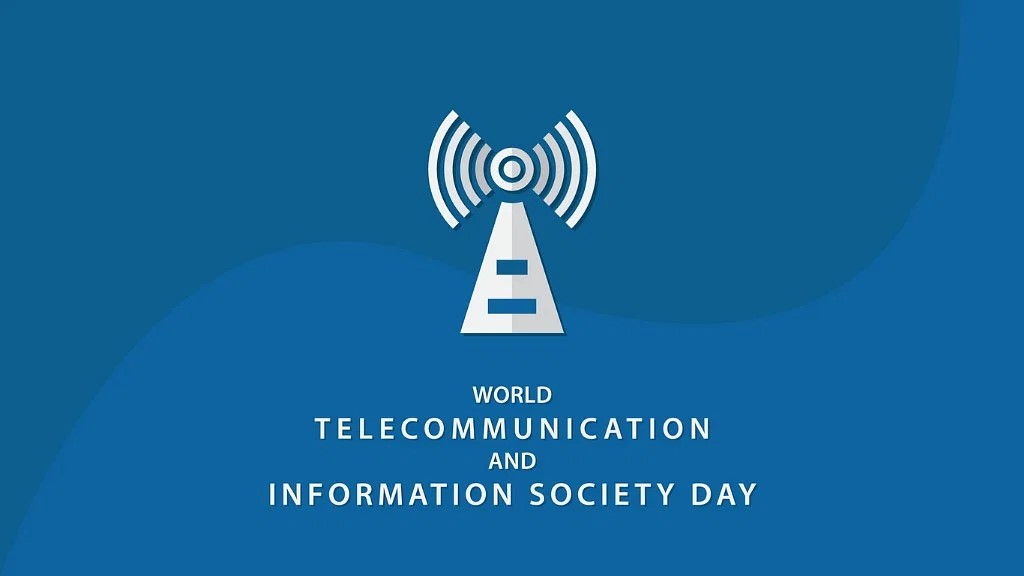
- 18 May 2024
Why is it in the News?
To commemorate the World Telecommunication and Information Society Day, C-DOT, the premier Telecom R&D Centre of the Department of Telecommunications (DoT) celebrates and announces special Initiatives “NIDHI” & “STAR Program” for the development of indigenous telecom solutions & technologies.
What is World Telecommunication and Information Society Day?
- World Telecommunication and Information Society Day (WTISD) is celebrated every year in May to honour the founding of the International Telecommunication Union (ITU) on May 17, 1969.
- The day can be traced back to commemoration of the two significant events in the history of global communication.
- World Telecommunication and Information Society Day (WTISD) commemorates two significant events in the history of global communication.
- Firstly, it marks the founding of the International Telecommunication Union (ITU) in 1865, when the first International Telegraph Convention was signed.
- Followed by, in November 2005, the World Summit on the Information Society (WSIS) called upon the United Nations General Assembly to also declare May 17th as World Information Society Day.
- And then in 2006, the ITU Plenipotentiary Conference in Antalya, Turkey, agreed to combine the two events as World Telecommunication and Information Society Day.
- This year’s World Telecommunications and Information Society Day 2024 focuses on the theme, “Digital Innovation for Sustainable Development,” underlying how digital innovation may help link everyone and create sustainable prosperity for all.
About the International Telecommunication Union (ITU):
- The International Telecommunication Union (ITU) is the United Nations specialized agency for information and communication technologies (ICTs).
- Established in 1865, it is the oldest among the UN’s 15 specialized agencies.
- ITU is responsible for allocating global radio spectrum and satellite orbits, developing technical standards to ensure network interconnectivity, and improving ICT access for underserved communities.
- Headquartered in Geneva, Switzerland, ITU is part of the UN Development Group and operates 12 regional offices worldwide.
- It functions as an intergovernmental public-private partnership with 193 member states and around 800 sector members. India, a member since 1952, was re-elected to the ITU Council for the 2019-2022 term.
Mitogenome
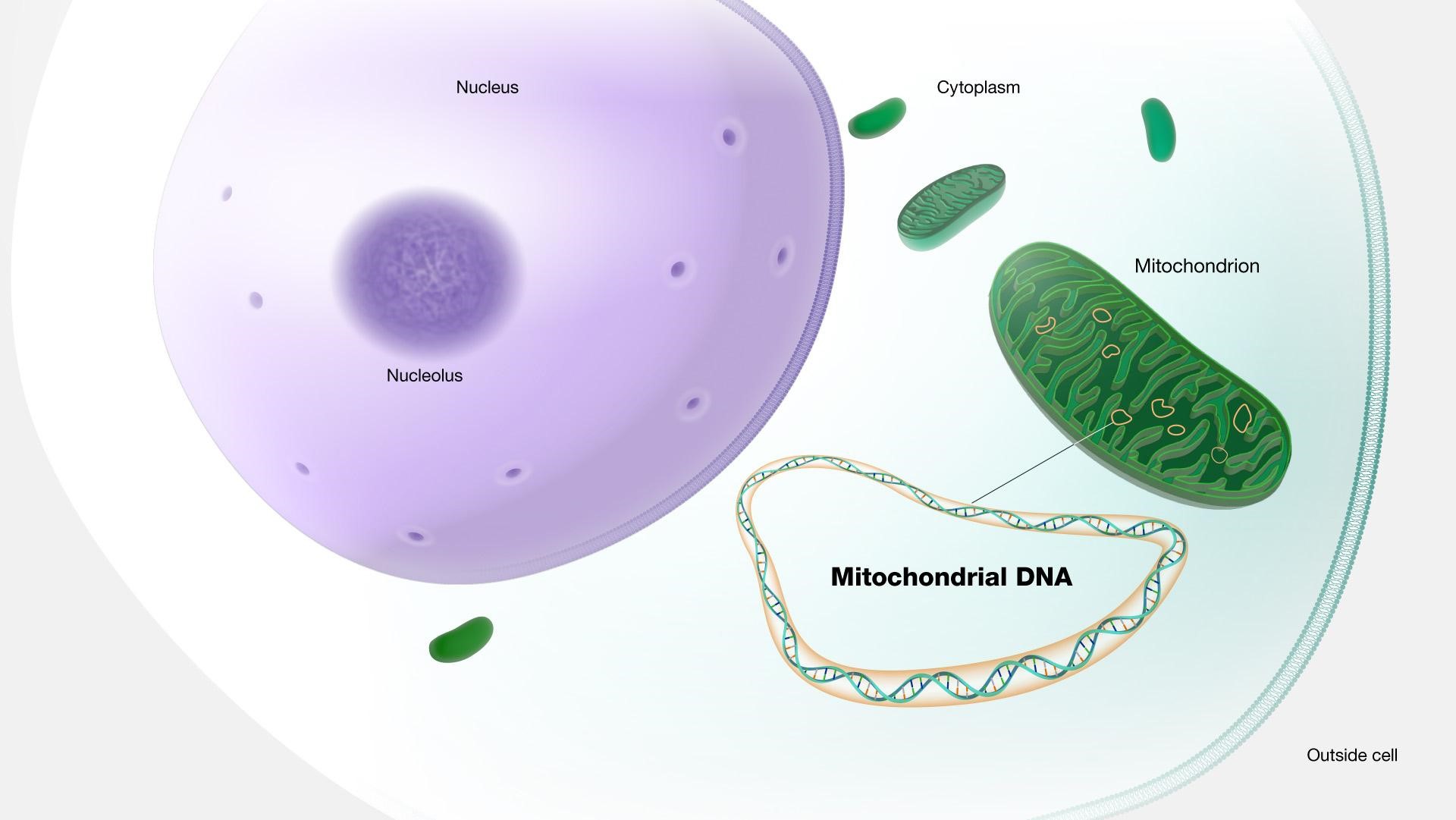
- 18 May 2024
Why is it in the News?
New research has found South African leopards originated from two unique clades in southern and central Africa approximately 0.8 million years ago.
What is a Mitogenome?
- DNA is found in the nucleus of cells and also in the mitochondrial genome, or mitogenome.
- Mitogenomes are DNA molecules that float around outside the nucleus of a cell.
- They store their own set of genetic information and are maternally inherited, which means they are only passed on from mother to offspring.
- Mitogenomes are a “genomic by-catch” when sequencing the whole genome.
- They are so abundant in cells that it is very easy to extract them.
- Studying mitogenomes is a reliable way to track the ancestry of a species.
- This is because genes mutate (change) at a regular rate over time.
- The changes in the mitogenome provide a picture of any species' evolution over hundreds of thousands of years.
What is DNA?
- DNA or Deoxyribonucleic Acid is the genetic material that codes the information for all the different processes that make an organism living like growth, replication, metabolism, etc.
- DNA is present in each cell (except for some viral species, RBCs, sieve cells, etc.) and is passed down from parents to their offspring. DNA is comprised of units called nucleotides.
- DNA is self-replicating, a long stretch of nucleotides.
- DNA is a form of nucleic acid and is one of the four major macromolecules that make up the living system.
- In eukaryotic cells, it is found in the nucleus of the cell whereas in prokaryotes it is found free-floating in the cell cytoplasm.
- Other than the nucleus DNA is also found in mitochondria, chloroplast, and in smaller forms called plasmid in certain bacterial species.
Materiovigilance Programme of India (MvPI)

- 18 May 2024
Why is it in the News?
The DCGI recently issued a directive to all medical device license holders and manufacturers, instructing them to report any adverse events associated with life-saving medical equipment on the government's Materiovigilance Programme of India (MvPI) platform.
What is the Materiovigilance Programme of India?
- The Materiovigilance Programme of India was launched on July 6, 2015, that monitors and evaluates the safety of medical devices across the country.
- It aims to systematically collect and scientifically analyze data on adverse events related to medical devices, offering guidance on their safe usage and supporting regulatory decision-making processes.
Objectives and Importance:
- The primary goal of the Materiovigilance Programme is to enhance patient safety in India by carefully recording, assessing, and determining the root causes of adverse events or risks associated with medical devices, including in-vitro diagnostics.
- By coordinating the reporting and analysis of such events, the programme seeks to inform regulatory bodies and healthcare professionals, promoting the appropriate use of medical devices and ultimately improving patient safety.
Governance and Regulation:
- Since 2018, the Indian Pharmacopoeia Commission (IPC) has served as the National Coordination Centre (NCC) for the programme.
- The Materiovigilance Programme is regulated by the Central Drugs Standards Control Organization (CDSCO), operating under the Ministry of Health and Family Welfare.
- The Drugs and Cosmetics Act, 1940, and Medical Device Rule, 2017, currently govern all medical devices in India.
- Given that the country is 80% dependent on imports for medical devices, the programme's role in ensuring the safety and efficacy of these essential healthcare tools is crucial.
About Drugs Controller General of India (DCGI):
- The Drugs Controller General of India (DCGI) leads the Central Drugs Standard Control Organization (CDSCO), ensuring the quality of drug supply nationwide.
- Nodal Ministry: Ministry of Health & Family Welfare
Functions:
- Approving new drugs and overseeing clinical trials.
- Establishing standards for drug manufacturing, sales, import, and distribution in India.
- Granting licenses for specific drug categories such as blood products, IV fluids, vaccines, and sera.
- Ensuring uniform implementation of the Drugs & Cosmetics Act, 1940, and its associated rules to safeguard patient safety, rights, and well-being.
Baobab Tree
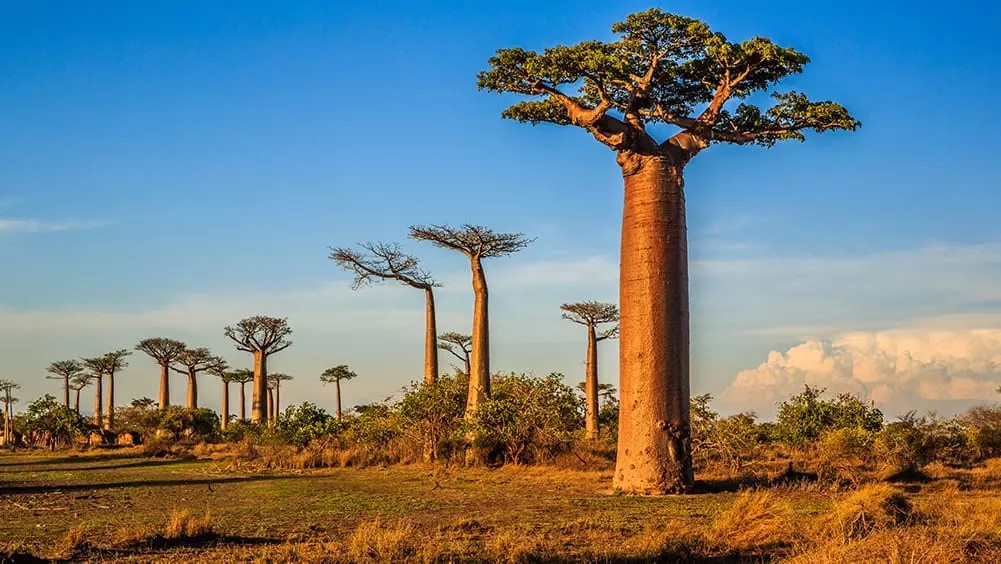
- 17 May 2024
Why is it in the News?
A new study has uncovered the origins of baobabs, the tall and uniquely shaped deciduous trees that are famously spotted on the island of Madagascar.
What are Baobab Trees?
- Baobabs are known for their great heights, with some extending up to 50 metres, and exceptionally long lifespans going up to 2,000 years.
- In India too, a few baobab trees exist, including one near the Golconda Fort in Andhra Pradesh that is believed to be more than 400 years old.
- The trees have trunks with large circumferences and thin, spindly branches.
- In local cultures, the trees are also revered because of the multiple uses their parts have, with the fruits and seeds being edible, the seed oil used for cooking and the bark fibre for clothing.
- They are also called “upside down” trees because of their tops resembling an uprooted plant turned upside down.
Essential for the ecosystem:
- Baobab trees are fundamental to the entire dry African savanna ecosystem.
- They help keep soil conditions humid, aid nutrient recycling, and slow soil erosion with their massive root systems.
- As a succulent, the tree absorbs and stores water from the rainy season in its massive trunk, producing a nutrient-dense fruit in the dry season, which can grow up to a foot long.
- The fruit contains tartaric acid and Vitamin C, serving as a vital nutrient and food source for many species.
- They are also an essential source of water and shelter for hundreds of animals, including birds, lizards, monkeys, and even elephants – which can eat their bark for moisture when there is no water nearby.
In human culture:
- For humans, the baobab’s fruit pulp can be eaten, soaked in water to make a refreshing drink, preserved into a jam, or roasted and ground to make a coffee-like substance.
- The bark can be pounded to make everything from rope, mats, and baskets to paper and cloth.
- Leaves are also used, they can be boiled and eaten, or glue can be made from their flower’s pollen.
What Did the Study Find?
- The study highlighted the threats facing baobab trees and examined their genetic makeup.
- It reported that three Madagascar species of baobab trees are threatened with extinction, according to the IUCN Red List of Threatened Species.
- The study identified various threats, including residential and commercial development and livestock farming, which require land clearing.
- However, even species not currently endangered show declining populations, suggesting that more rigorous conservation strategies are needed to ensure their long-term survival.
- This necessitates a detailed understanding of the baobabs' genetics.
- Genomic sequencing revealed a consensus on the monophyly of the Malagasy lineage from Madagascar.
- According to DNA studies, baobab trees first arose in Madagascar 21 million years ago, with their seeds later carried by ocean currents to Australia and mainland Africa, where they evolved into distinct species.
- The study also warned that climate change poses severe threats to Adansonia suarezensis from Madagascar, predicting its possible extinction by 2080.
- Due to their unique ecological roles and low genetic diversity, these species are likely to have reduced resilience to environmental changes and habitat fragmentation.
Leopard Cat

- 17 May 2024
Why is it in the News?
The leopard cat (Prionailurus bengalensis), a small wild cat native to South, Southeast and East Asia, was recently spotted in Maharashtra’s Pench, in what is being billed as Central India’s first sighting of the species.
About Leopard Cat:
- The Leopard cat (Prionailurus bengalensis) is a small wild cat native to continental South, Southeast, and East Asia.
- With its distinctive leopard-like colouring, this small wildcat is known for its remarkable adaptability and extensive distribution across Asia.
Habitat and Distribution:
- Leopard cats can be found in a variety of environments, ranging from the Amur region in Russia to the Korean Peninsula, China, Indochina, the Indian Subcontinent, northern Pakistan, and as far south as the Philippines and the Sunda Islands of Indonesia.
- Although they can inhabit agriculturally used areas, leopard cats prefer forested habitats, including tropical evergreen rainforests, subtropical deciduous and coniferous forests, and plantations at various altitudes.
Physical Characteristics:
- Size and appearance vary considerably across their range, with a length of 45 to 75 cm (18 to 30 inches), excluding their 23-35 cm (9-13.8 inches) tail.
- Their colouration ranges from pale tawny to yellow, red, or grey, with white underparts and distinctive spots.
- Most leopard cats have four black stripes running from their forehead to the nape, breaking into short bands and elongated spots on their shoulders.
Behaviour and Diet:
- As solitary and nocturnal carnivores, leopard cats primarily feed on rodents, tree shrews, and hares, playing a crucial role in maintaining the balance of their ecosystems.
Conservation Status:
- Listed as "Least Concern" on the IUCN Red List, leopard cats face threats from habitat loss, poaching, and human-wildlife conflict. Continued monitoring and conservation efforts are essential to protect this species and its vital role in Asia's diverse ecosystems.
Facts about Pench Tiger Reserve:
- Location: Situated in the southern reaches of the Satpura hills, the Pench Tiger Reserve spans Seoni and Chhindwara districts in Madhya Pradesh and extends into Nagpur district in Maharashtra as a separate Sanctuary.
- It derives its name from the Pench River, which flows from north to south through the Reserve.
- The reserve encompasses the Indira Priyadarshini Pench National Park, the Pench Mowgli Sanctuary, and a buffer zone.
- The area served as the inspiration for Rudyard Kipling's renowned work, "The Jungle Book."
- Vegetation: The undulating topography supports a diverse range of vegetation, from moist, sheltered valleys to open, dry deciduous forests.
- Flora: Pench Tiger Reserve boasts a rich variety of flora, including teak, saag, mahua, and various grasses and shrubs.
- Fauna: Renowned for its wildlife diversity, the reserve is home to large herds of Chital, Sambar, Nilgai, Gaur (Indian Bison), and wild boar.
- Key predators include the tiger, leopard, wild dogs, and wolf. Additionally, the reserve supports over 325 species of resident and migratory birds, including the Malabar Pied Hornbill, Indian Pitta, Osprey, Grey Headed Fishing Eagle, and White Eyed Buzzard.
Deda Method of Preserving Seeds
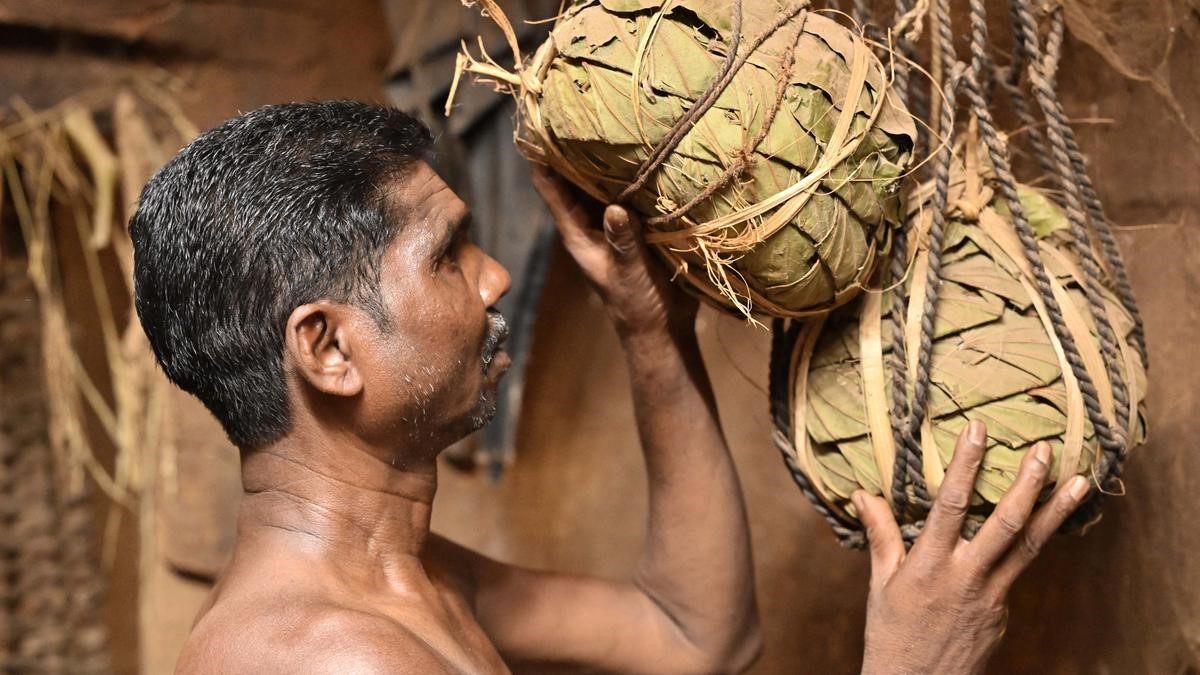
- 17 May 2024
Why is it in the News?
In his 50s, Madakam Unga, a Muria tribal farmer who migrated from Chhattisgarh and settled in the dense forests of the Godavari Valley, is still practising ‘deda’, a traditional method of preserving seeds that his ancestors handed over to his family.
What is the Deda Method?
- The Deda Method is an ancestral seed preservation technique passed down through generations.
- This unique method involves the use of natural materials to create a protective, airtight environment for the seeds, ensuring their viability for future planting.
Preservation Process:
- Seeds are packed tightly and wrapped in leaves to form a sturdy bundle resembling a boulder.
- The seed-filled leaf packages are then woven together with Siali leaves (Bauhinia vahlii), locally known as 'addakulu,' forming the distinctive deda structure.
- A deda consists of three layers:
- The innermost layer contains wood ash spread over Siali leaves.
- The ash is then covered with lemon leaves, creating a protective casing.
- Lastly, seeds are preserved within this casing and sealed, with each deda supporting up to 5kg of seeds.
Advantages:
- The Deda Method effectively protects seeds from pests and worms, ensuring their quality and viability.
- Seeds preserved using this technique can be used for cultivation for up to five years.
- This method is particularly useful for preserving the seeds of various pulses, such as green gram, red gram, black gram, and beans.
- By utilizing the Deda Method, farmers can maintain a reliable, diverse collection of seeds, contributing to sustainable agricultural practices and supporting long-term food security.
Facts About Muria Tribe:
- Location: The Muria tribe is found in the states of Telangana, Andhra Pradesh, Chhattisgarh, and Odisha.
- Language: They speak Koya, a Dravidian language.
- Population and Status: In Andhra Pradesh, the Muria, also known as 'Gutti Koyas' by native tribes, are internally displaced people (IDPs) with a population of around 6,600.
- Cultural Practices: The Muria have a progressive outlook on marriage and life.
- A notable example is the Ghotul, a communal dormitory that provides an environment for Muria youth to explore and understand their sexuality.
Recognition: While most Gutti Koya belong to the Gond or Muria communities, which are recognized as Scheduled Tribes in Chhattisgarh, they lack such recognition in Telangana.
Synchrotron
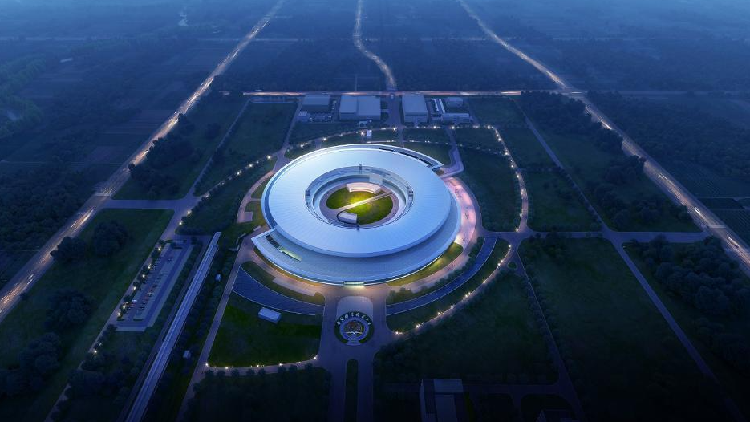
- 17 May 2024
Why is it in the News?
China's latest scientific achievement, the High Energy Photon Source (HEPS), is poised to become Asia's first fourth-generation synchrotron light source which is scheduled to commence operations by the end of this year.
What is a Synchrotron?
- A synchrotron is a type of circular particle accelerator where particles travel in a loop.
- It functions by accelerating charged particles, typically electrons, through sequences of magnets until they approach the speed of light.
How Does It Work?
- Acceleration: Charged particles are accelerated through magnets.
- Production of Light: These high-speed electrons generate extremely bright light, known as synchrotron light.
- This light, predominantly in the X-ray region, is millions of times brighter than conventional sources and 10 billion times brighter than the sun.
- Beamlines and Workstations: The intense light is directed down beamlines to experimental workstations for research purposes.
Applications:
- Research: Scientists use synchrotron light to study tiny matter such as atoms and molecules.
- By examining how a sample scatters, diffracts, absorbs, or reemits the synchrotron light, they can uncover details about its structure and chemical composition.
Global Presence:
- There are approximately 70 synchrotrons worldwide in various stages of development.
- They have varying technical specifications and uses, ranging from practical applications to fundamental theoretical research.
In India:
- India has a synchrotron facility known as the "Indus Synchrotron."
- It is located at the Raja Ramanna Centre for Advanced Technology (RRCAT) in Indore, Madhya Pradesh.
- The Indus Synchrotron is a third-generation synchrotron radiation source that is used for various research applications in fields such as materials science, biology, and environmental science.
What is the High Energy Photon Source (HEPS)?
- HEPS (High Energy Photon Source) is recognized as the brightest synchrotron X-ray source in Asia.
- Location: The HEPS facility is situated in Huairou, China, approximately 50 kilometres from Beijing.
- Acceleration Capabilities: HEPS is designed to accelerate electrons up to energies of 6 gigaelectron volts within its 36-kilometer circumference storage ring, producing high-energy X-rays for research purposes.
- Nanoscale Investigations: The high-energy X-rays generated by HEPS can penetrate deep into samples, allowing researchers to study intricate details at the nanometer scale.
- Diverse Research Applications: HEPS will cater to various research fields, including energy, condensed matter physics, materials innovation, and biomedicine, by providing access to 14 specialized beamlines.
- Superiority to Existing Synchrotrons: Compared to China's current most advanced synchrotron, the Shanghai Synchrotron Radiation Facility (with a circumference of 432 meters), HEPS will offer a time resolution 10,000 times better.
PREFIRE (Polar Radiant Energy in the Far-InfraRed Experiment) Mission

- 17 May 2024
Why is it in the News?
NASA is set to launch the two small satellites of the PREFIRE mission from New Zealand on May 22 aimed at filling in critical gaps in data from Earth's polar regions.
What is the PREFIRE Mission?
- PREFIRE (Polar Radiant Energy in the Far-InfraRed Experiment) is a NASA mission that involves sending two tiny twin spacecraft, known as CubeSats, to the Earth's polar regions to gather data on the heat energy radiated out to space and its impact on our climate.
- PREFIRE consists of two, 6U CubeSats with a baseline mission length of 10 months.
- These shoebox-sized satellites will orbit at altitudes between 292 and 403 miles, crossing paths in the atmosphere.
Objectives:
- The mission will help close a gap in understanding how much of Earth’s heat is lost to space, especially from the Arctic and Antarctica.
- Analysis of PREFIRE’s measurements will inform climate and ice models, providing better projections of how a warming world will affect sea ice loss, ice sheet melt, and sea level rise.
- Improving climate models can ultimately help to provide more accurate projections on the impacts of storm severity and frequency, as well as coastal erosion and flooding.
- By studying the far-infrared radiation emitted from these regions, PREFIRE will help improve the accuracy of climate models, enhancing our understanding of phenomena such as Arctic warming, sea ice loss, and ice-sheet melting.
The mission will help in:
- Uncover the reasons behind the Arctic warming more than 2½ times faster than the global average since the 1970s.
- Provide scientists with a clearer understanding of how efficiently far-infrared heat is emitted by materials such as snow and sea ice, and how clouds affect the amount of far-infrared radiation that escapes to space.
- Enhance predictions about future changes in the heat exchange between Earth and space, and how these changes will impact phenomena like ice sheet melting, atmospheric temperatures, and global weather patterns.
How will the Satellites Work?
- The mission with cube satellites about the size of a shoebox will be launched aboard an Electron launch vehicle.
- It is equipped with technology proven on Mars and will measure a “little-studied portion” of the radiant energy emitted by Earth.
- Two satellites carrying a thermal infrared spectrometer will be in asynchronous near-polar orbits and will be passing over a given spot on Earth at different times. To maximize coverage, they will be overlapping every few hours near the poles.
- The instruments weighing less than 6 pounds (3 kilograms) each will make readings using a device called a thermocouple, similar to the sensors found in many household thermostats.
Why is it Important to Study the Polar Regions?
- According to NASA, Earth's climate balance hinges on the equilibrium between the heat energy the planet receives from the Sun and the amount it radiates back into space.
- The difference between incoming and outgoing energy determines Earth's temperature and climate.
- The polar regions are crucial in this balance.
- Changes in the polar regions can significantly impact global weather patterns.
- Extreme storms, flooding, coastal erosion – all of these phenomena are influenced by what’s happening in the Arctic and Antarctic.
- This underscores the importance of understanding polar dynamics to predict and mitigate global climate effects.
Digital Arrest

- 16 May 2024
Why is it in the News?
With the cases of extortion and ‘digital arrest’ frauds on the rise, the Indian Cyber Crime Coordination Centre (I4C) working under the Union Ministry of Home Affairs issued an advisory asking the citizens to be alert about such frauds.
What is ‘Digital Arrest’?
- ‘Digital arrest’ is a new and innovative tactic employed by cybercriminals to defraud gullible victims and extort money.
- The modus operandi in this cybercrime method is that fraudsters pose as law enforcement officials such as police, Enforcement Directorate, and CBI, among others, and manipulate them into believing that they have committed some serious crime.
- The cyber fraudsters deceive the victim into believing that he or she has been put under ‘digital arrest’ and will be prosecuted if they do not pay the scamsters a huge amount of money.
- The fraudster often uses the tactic of instilling fear and a sense of urgency in the victims, ensuring they part with their money before realizing it's a scam.
- The cyber criminals often force the naive victims to self-arrest or self-quarantine themselves, by tricking them into believing that they have been put under ‘digital arrest’ and cannot leave their house unless they pay up.
Modus Operandi of Digital Arrest Scams:
- Initial Engagement: Fraudsters initiate contact with unsuspecting individuals through various digital communication channels, such as phone calls, WhatsApp, or Skype.
- Fear and Urgency Manipulation: The scammers employ psychological tactics to instil fear and a sense of urgency in their victims.
- They present fabricated evidence and falsely claim that the victim is embroiled in criminal activities or is facing an imminent arrest warrant.
- Elaborate Scams: To enhance the legitimacy of their scheme, the scammers create elaborate setups, including simulated police stations, virtual interrogations, and video calls with individuals posing as senior police officers.
- Layered Interrogations: Victims are subjected to multiple rounds of “interrogations,” with the scammers assuming different roles, such as a “constable,” a “sub-inspector,” and finally a “DCP-level officer.”
- This layered approach aims to convince victims of the gravity of the situation and increase their susceptibility to the scam.
- Financial Exploitation: Under the imminent threat of arrest, victims are coerced into transferring substantial sums of money into designated accounts.
- The scammers deceitfully claim that these funds are necessary to clear the victim’s name or resolve the alleged criminal charges.
Actions Taken by the Centre:
- Intelligence agencies have determined that the incidents are part of a coordinated online economic crime network operated by transnational crime syndicates.
- The Indian Cyber Crime Coordination Centre (I4C), overseen by the Ministry of Home Affairs, has collaborated with Microsoft to block over 1,000 Skype IDs associated with such illicit activities.
- Additionally, efforts are underway to block SIM cards, mobile devices, and "mule" accounts utilized by cybercriminals.
- Money mules, also known as "smurfers," are individuals unwittingly used by fraudsters to launder stolen or illegal money through their bank accounts.
- Following reports of such incidents, these individuals often become the focus of police investigations due to their involvement, as highlighted in a security advisory by HDFC Bank.
- The Home Ministry is collaborating with other ministries, their agencies, the Reserve Bank of India (RBI), and various organizations to combat these criminal activities.
- I4C is actively providing technical support and inputs to the police forces of states and union territories to identify and investigate cases.
- I4C has leveraged its social media platform Cyberdost, along with its presence on platforms like Twitter, Facebook, and Instagram, to disseminate infographics and videos aimed at raising awareness about cybercrime.
- Citizens are urged to remain vigilant and help spread awareness about cybercrime.
- They are encouraged to report any such incidents promptly to the cybercrime helpline at 1930 or through the website http://www.cybercrime.gov.in.
- Additionally, filing a complaint and notifying the local police is advised.
India VIX

- 16 May 2024
Why is it in the News?
India VIX, which is an indicator of the market’s expectation of volatility over the near term, surged past the 21 mark recently.
What is India VIX?
- India VIX is a volatility index computed by the NSE based on the order book of NIFTY Options.
- For this, the best bid-ask quotes of near and next-month NIFTY options contracts, which are traded on the F&O segment of NSE are used.
- India VIX indicates the investor’s perception of the market’s volatility in the near term i.e. it depicts the expected market volatility over the next 30 calendar days.
- The higher the India VIX values, the higher the expected volatility and vice versa, as per NSE.
- ‘VIX’ is a trademark of the CBOE, and Standard & Poor’s has granted a license to NSE, with permission from the CBOE, to use such a mark in the name of the India VIX and for purposes relating to the India VIX.
What is the Volatility Index?
- The Volatility Index, VIX or the Fear Index, is a measure of the market’s expectation of volatility over the near term.
- Volatility is often described as the ‘rate and magnitude of changes in prices’ and in finance often referred to as risk.
- Usually, during periods of market volatility, the market moves steeply up or down and the volatility index tends to rise.
- As volatility subsides, the Volatility Index declines.
- The Volatility Index is a measure of the amount by which an underlying index is expected to fluctuate in the near term, (calculated as annualised volatility, denoted in percentage e.g. 20 per cent) based on the order book of the underlying index options.
- The Chicago Board of Options Exchange (CBOE) was the first to introduce the volatility index for the US markets in 1993 based on S&P 100 Index option prices.
- In 2003, the methodology was revised and the new volatility index was based on S&P 500 Index options.
- Since its inception, it has become an indicator of how market practitioners think about volatility.
- Investors use it to gauge market volatility and base their investment decisions accordingly.
Global Report on Internal Displacement 2024 (GRID-2024)
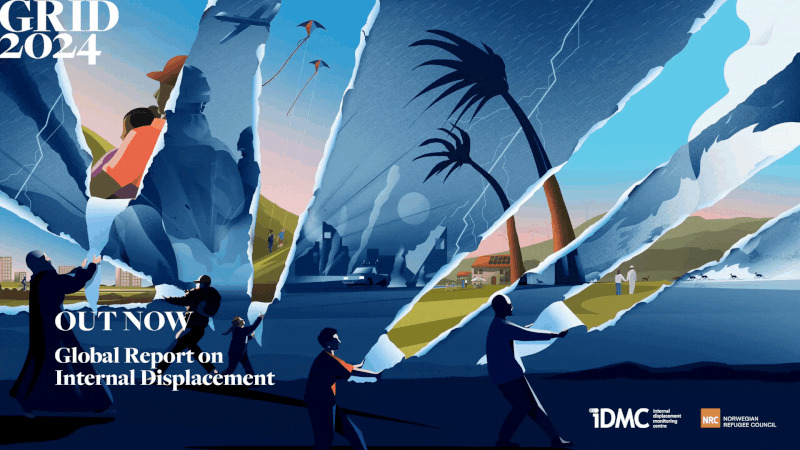
- 16 May 2024
Why is it in the News?
Floods, cyclones, earthquakes and other disasters triggered over half a million internal displacements in India in 2023, according to Geneva-based Internal Displacement Monitoring Centre (IDMC).
About Global Report on Internal Displacement 2024:
- The Global Report on Internal Displacement (GRID) 2024, published by the Internal Displacement Monitoring Centre (IDMC) based in Geneva, Switzerland.
- It is the authoritative source for data and analysis on the state of internal displacement for the previous year.
- Each year, IDMC presents the validated estimates of internal displacements by conflict and disasters, and the total cumulative numbers of IDPs worldwide.
- The GRID also provides an overview of the year’s most significant internal displacement situations, highlighting potential measures to address the issue across the humanitarian, development, disaster risk reduction and climate change agendas.
- The 2024 Global Report on Internal Displacement (GRID) report presents the data and analysis behind the 75.9 million people living in internal displacement as of the end of 2023.
- It is the ninth edition of the GRID and includes global and regional insights into the risk, scale and impacts of internal displacement.
Highlights of the GRID 2024:
- Rising Numbers of (IDPs): In 2023, the number of internally displaced persons (IDPs) reached 75.9 million, up from 71.1 million the previous year.
- Causes of Displacement: Disasters contributed to 7.7 million displacements, with earthquakes being responsible for one-fourth of these.
- Conflict and violence led to 68.3 million displacements.
- High-Displacement Countries: Sudan, Syria, the Democratic Republic of Congo (DRC), Colombia, and Yemen account for almost half of the world's IDP population.
- Significant Increases: Sudan had the highest number of IDPs recorded for a single country in 2023, reaching 1 million.
- The majority of new displacements occurred in Sudan, the Palestinian territories, and the DRC, accounting for nearly two-thirds of all cases.
- South Asia Displacement: Approximately 3 million people across South Asia experienced internal displacement due to conflict and violence, with 80% of them located in Afghanistan.
- Manipur violence resulted in 67,000 displacements, marking the highest number of conflict and violence-related displacements in India since 2018.
- Impact of Natural Disasters: There was a notable decrease in internal displacement due to natural disasters in India in 2023, dropping from 2.5 million in 2022 to 528,000.
About Internal Displacement Monitoring Centre (IDMC):
- Established in 1998, the IDMC is the leading source of information and analysis on internal displacement.
- It was created to address a significant gap in knowledge on global patterns and scales of internal displacement.
- IDMC defines internal displacement as the number of forced movements of people within their own country over a given year.
- The IDMC is a part of the Norwegian Refugee Council (NRC), an independent, non-governmental humanitarian organization.
- Primary Roles: The IDMC serves as a global monitor and advocate for evidence-based policy and action.
- It aims to influence governments, UN agencies, donors, international organizations, and NGOs.
- As the official repository of data and analysis on internal displacement, the IDMC's GRID provides critical insights into the global internal displacement crisis and aids in developing informed solutions.
Extra-pulmonary TB
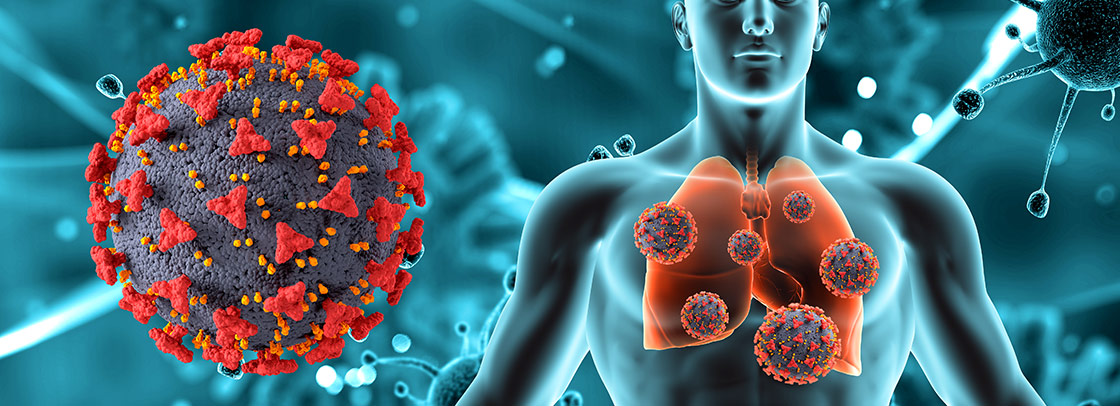
- 16 May 2024
Why is it in the News?
Approximately 20% of tuberculosis (TB) patients suffer from Extra-pulmonary TB, yet the majority remain undiagnosed. Even among those diagnosed, access to appropriate care is limited to specialized health facilities, posing a challenge to effective treatment.
What is Extra-pulmonary TB?
- Extra-pulmonary tuberculosis (EPTB) is a form of tuberculosis (TB) that affects organs outside the lungs, such as the lymph nodes, pleura, bones, joints, and central nervous system.
- EPTB accounts for a significant portion of active TB cases, ranging from 20% to 40%, and occurs more frequently in immunosuppressed individuals and young children.
- In HIV-positive individuals, EPTB is present in more than 50% of cases.
- EPTB diagnosis remains challenging due to the difficulty in accessing affected sites and the low sensitivity of diagnostic tests.
- A combination of mycobacteriology and histopathologic examinations, along with molecular techniques such as polymerase chain reaction, can aid in the diagnosis.
- Biochemical markers, like adenosine deaminase or gamma interferon, can be useful adjuncts in diagnosing TB-affected serosal fluids.
Treatments:
- Treatment of EPTB typically involves standard anti-TB drug therapy, but the ideal regimen and duration have not yet been established.
- While the disease usually responds to treatment, complications and paradoxical responses may occur, necessitating the distinction from other causes of clinical deterioration.
- Surgery may be required to obtain diagnostic specimens or manage complications.
Challenges with EPTB:
- EPTB infections may leave disease markers lingering even after treatment, posing concerns about relapse.
- Standardized diagnosis and treatment protocols for various affected organs are lacking, complicating management.
- A lack of awareness among both patients and physicians, along with the absence of precise diagnostic and treatment criteria, adds to the challenge.
- Even after completing anti-TB therapy, some EPTB patients may experience lingering effects of the disease.
- The existing INDEX-TB guidelines, formulated over a decade ago, require updating to incorporate the latest insights and experiences.
Kadar Tribe
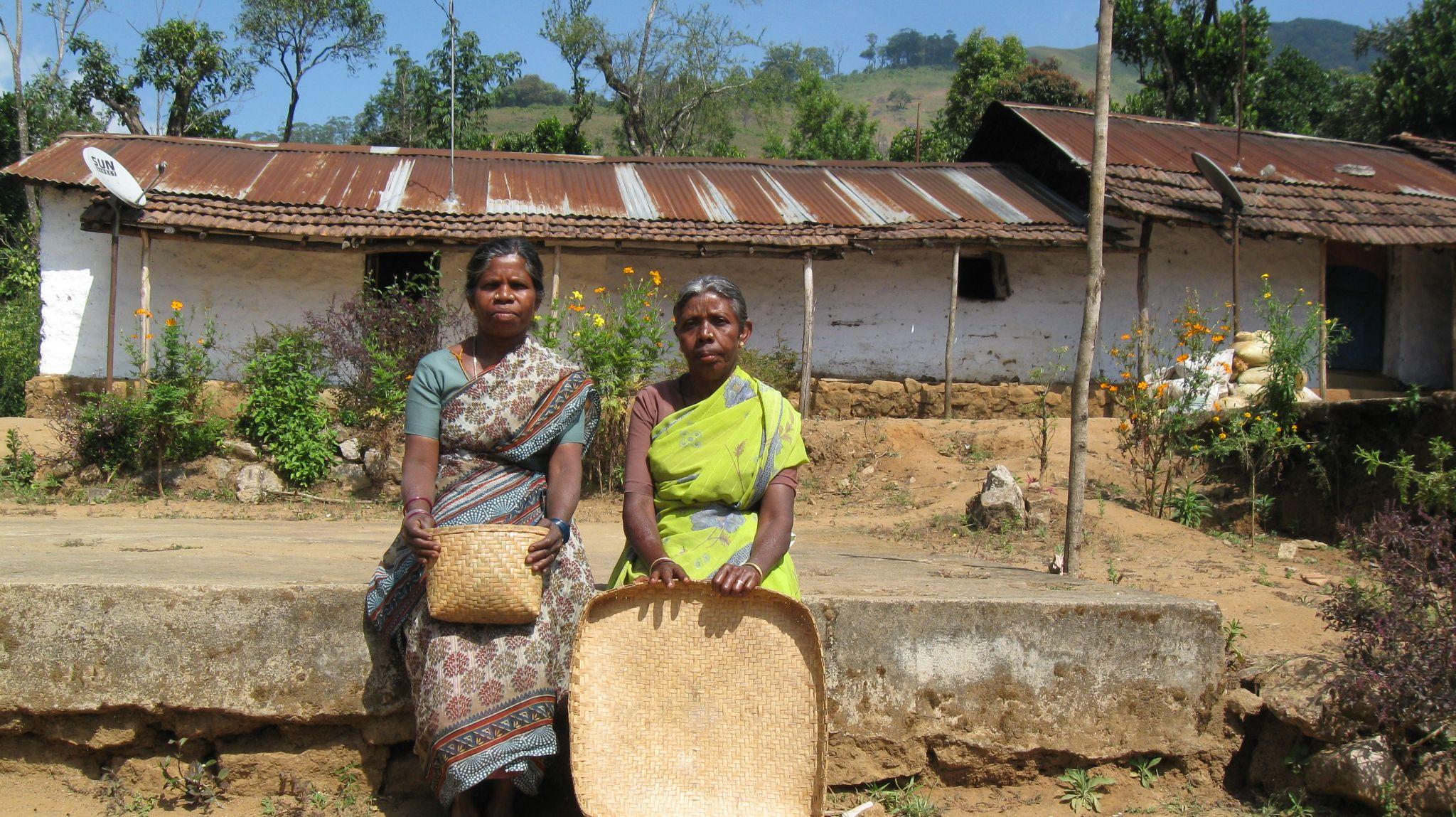
- 16 May 2024
Why is it in the News?
The recent death of a Kadar tribesman in Tamil Nadu’s Anamalai Tiger Reserve in an elephant attack has left the indigenous community and conservationists in shock as Kadars are known to co-exist with wild elephants for ages.
About Kadar Tribes:
- The Kadar tribes are a small indigenous tribal community residing in South India, primarily along the hilly border between Cochin in Kerala and Coimbatore in Tamil Nadu.
- Traditionally, they are forest dwellers who rely on forest resources for their livelihood, opting not to practice agriculture.
- Their shelters are typically thatched with leaves, and they frequently shift locations based on their employment needs.
- Rather than subsisting solely on gathered food, they prefer rice obtained through trade or wages.
- With a long history of specialization, the Kadars are known for collecting various forest products like honey, wax, sago, cardamom, ginger, and umbrella sticks, which they trade with merchants from the plains.
- They maintain a symbiotic relationship with nature, emphasizing the coexistence of Kadar and Kaadu (forest), and have established traditional protocols for the sustainable use of forest resources.
- Every resource collection practice, such as honey extraction, firewood gathering, resin tapping, or herb picking, is conducted with regeneration time in mind.
- The population of the Kadars was estimated to be around 2,000 individuals in the early 21st century, and they primarily speak Dravidian languages like Tamil and Kannada.
- Their religious beliefs include worshipping jungle spirits, a kindly creator couple, and local forms of Hindu deities.
- While recognized as a Particularly Vulnerable Tribal Group (PVTG) in Kerala, they do not hold the same status in Tamil Nadu.
About Anamalai Tiger Reserve:
- Anamalai Tiger Reserve is a protected area located in the Anamalai Hills of Pollachi and Coimbatore District of Tamil Nadu, India.
- Annamalai Tiger Reserve was originally called Anamalai Wild Life Sanctuary notified in the year 1974 and established in the year 1976.
- Later, it was renamed as Indira Gandhi Wildlife Sanctuary & National Park in honour of former Prime Minister Indira Gandhi's visit in 1961.
- According to the National Tiger Conservation Authority, the sanctuary was declared as Anamalai Tiger Reserve in 2007.
- The sanctuary presently includes a core area of 958.59 sq. km and a buffer area of 521.28 sq. km forming a total area of 1479.87 sq. km.
- It is located at an altitude of 1400 m in the Anamalai Hills of the Western Ghats.
Solar Storms

- 15 May 2024
Why is it in the News?
According to the Indian Space Research Organisation (ISRO), Indian satellites did not suffer any major outages due to the multiple powerful earth-bound solar storms recently.
What is a Solar Storm?
- Solar storms are a normal part of our Sun's solar cycle.
- It occurs when the Sun emits huge bursts of energy in the form of solar flares and coronal mass ejections.
- These phenomena send a stream of electrical charges and magnetic fields toward the Earth at a speed of about three million miles per hour.
- When a solar storm strikes the Earth, it often produces a dazzling “northern lights" display in parts of the atmosphere that can be seen in areas close to the Arctic Circle.
- Solar storms start with a huge explosion on the Sun.
- These explosions — called solar flares — can be about as powerful as billions of nuclear bombs!
- Solar flares usually go hand-in-hand with the release of huge streams of charged plasma that travel at millions of miles per hour.
- These streams are called coronal mass ejections, or CMEs.
- When CMEs hit the Earth, they can cause geomagnetic storms that disrupt satellites and electrical power grids.
- For example, in 2017 two massive solar flares fired out from the surface of the Sun disrupted devices such as GPS navigation systems on Earth.
How often do solar storms happen?
- Scientists who study solar storms have discovered that the frequency of solar flares appears to follow an 11-year solar cycle.
- At times of peak activity, there could be several solar storms each day.
- At other times, there might be less than one solar storm per week.
What is the Impact of Solar Storm?
- It majorly interferes with several services, including GPS navigation, weather forecasting, communication, and other satellite-dependent services.
- Besides that, it also has a significant impact on satellite networks and communication.
- They can create geomagnetically induced currents (GICs), which can overload electrical systems and cause damage to transformers, issues with voltage regulation, and widespread power outages.
- Furthermore, because solar storms increase the amount of solar and cosmic radiation that reaches the top regions of Earth's atmosphere, they also pose health concerns to people, especially aircraft crew and passengers, especially on flights at high latitudes.
- These storms have the potential to disrupt infrastructure in near-Earth orbit and on Earth's surface, affecting communications, the electric power grid, navigation, radio, and satellite operations.
Humboldt Glacier
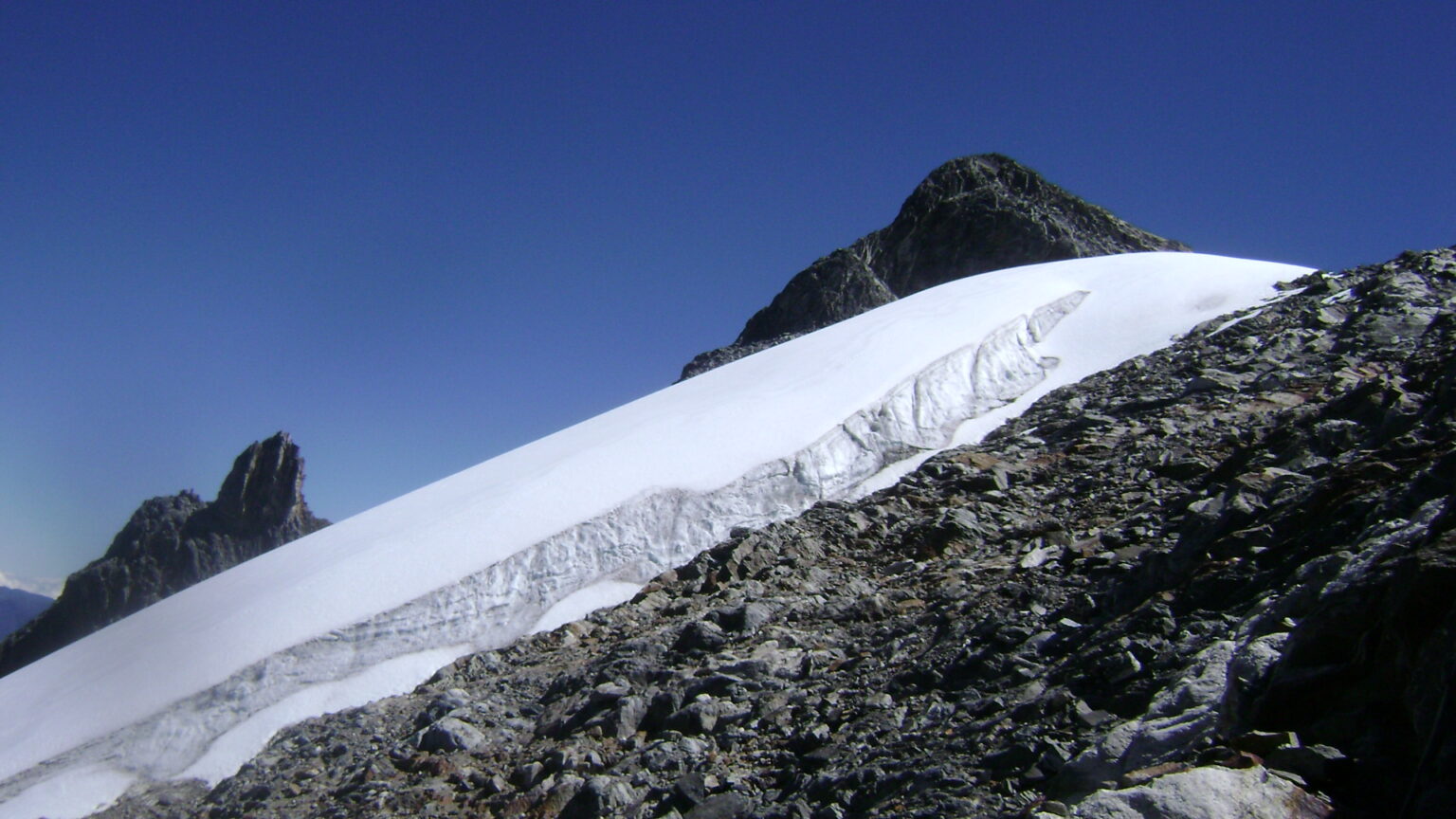
- 15 May 2024
Why is it in the News?
Venezuela is thought to be the first nation in modern times to have completely lost all of its glaciers.
About Humboldt Glacier:
- Venezuela's Humboldt Glacier, also known as La Corona, held great significance as the country's last remaining glacier.
- Located in the Sierra Nevada de Mérida mountain range in the Andes, at an altitude of approximately 5,000 meters, the Humboldt Glacier was part of a group of six glaciers that once covered an area of 10 square kilometres.
- However, due to the accelerated melting caused by climate change, five of these glaciers had vanished by 2011, leaving Humboldt as the sole remnant.
- Humboldt Glacier's deterioration continued at an alarming pace in subsequent years.
- Recent studies conducted by the International Cryosphere Climate Initiative (ICCI), a scientific advocacy organization, revealed that the glacier had shrunk to an area of less than 2 hectares.
- As a result, it was downgraded from a glacier to an ice field, marking Venezuela as the first country in modern history to lose all of its glaciers.
- The demise of Humboldt Glacier serves as a stark warning of the global consequences of climate change.
- It exemplifies the rapid loss of ice in tropical regions, which not only impacts local ecosystems and water resources but also contributes to rising sea levels and exacerbates the effects of climate change worldwide.
About the International Cryosphere Climate Initiative (ICCI):
- International Cryosphere Climate Initiative (ICCI) was formed in 2009 following COP-15 in Copenhagen.
- It is a network of senior policy experts and researchers working with governments and organizations to create, shape and implement initiatives designed to preserve as much of the Earth’s cryosphere as possible.
- CCI's work focuses on three major areas of the cryosphere:
- The Arctic
- The Antarctic
- High mountain regions
- By connecting cutting-edge science to a variety of policy-making forums and supporting integrated projects worldwide to protect the cryosphere, ICCI advances climate action.
- ICCI programs target the unique climate dynamics at work in the cryosphere, while at the same time lending increased urgency to global climate efforts aimed at CO2 and other greenhouse gases by communicating the unexpected rapidity and global implications of cryosphere warming.
NISAR Satellite Can Monitor Earth’s Tectonic Movements

- 15 May 2024
Why is it in the News?
ISRO Chairman S. Somanath recently announced that the NISAR satellite has the capability to accurately monitor tectonic movements and complete full mappings of the Earth twice a month.
About the NISAR Satellite:
- NISAR is a joint Earth-observing mission between NASA and the Indian Space Research Organization (ISRO).
- It is a Synthetic Aperture Radar satellite with two bands.
- It will be launched into a polar Sun-synchronous dawn-dusk orbit.
- One is the S-band and the other is the L-band.
- The S-band payload has been made by the ISRO and the L-band payload by the U.S.
- The U.S. will contribute to the large deployable antenna.
- This being a dual-band polarizable radar, it can do a lot of things.
- First, because it has a large deployable antenna with an 18-metre diameter, it has a very high swath.
- It can fully cover the earth in approximately 14 to 15 days, according to radar.
- It can monitor various aspects in very high resolution.
- For example, it can monitor the tectonic movements to centimetre accuracy.
- It can do measurements of water bodies accurately.
- It can look at water stressing on the earth, wherever there is a deficiency of water.
- It can ground-penetrate to a certain depth.
- It is capable of monitoring the vegetation cover and snow cover.
- It, therefore, basically looks at the whole of the earth in terms of surface, water, greenery and all of that.
- It measures accurately and gives repetitive, full coverage of the earth two times a month.
- It means it is capable of a lot of observation and this data will be available to both India and the U.S.
- We can study the water-stressing, climate change-related issues, and agricultural changes through patterns, yield, desertification and continental movements precisely with respect to annual water cycle movements.
- It can measure tectonic plate movements accurately.
- So a lot of geological, agricultural and water-related observations can be obtained from this satellite.
Mission Objectives:
- The primary goal of NISAR is to provide precise measurements of tectonic plate movements, enabling comprehensive observations in geology, agriculture, and water-related domains.
- Additionally, it aims to analyze water stress, climate change impacts, agricultural shifts, desertification, and continental shifts with accuracy, particularly concerning annual water cycle variations.
- NISAR's data will facilitate global resource and hazard management, while also aiding scientists in comprehending climate change dynamics and its effects.
Launch Schedule:
- Initially planned for July, the launch is now expected in October-November due to issues on the U.S. side requiring corrections.
Memory of the World (MoW) Programme
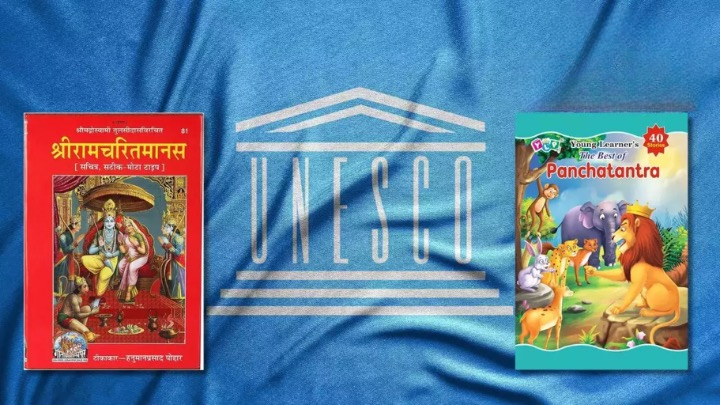
- 15 May 2024
Why is it in the News?
Three Indian literary works, Ramcharitmanas, Panchatantra, and Sah?dayaloka-Locana, were added to UNESCO’s Memory of the World Asia-Pacific Regional Register during the tenth meeting of the Memory of the World Committee for Asia and the Pacific (MOWCAP).
About Memory of the World Programme:
- The Memory of the World (MoW) Programme is an international initiative by UNESCO launched in 1992 aimed at preserving and recognizing the world's significant documentary heritage.
- The program's objective is to identify and protect important documents in a manner similar to how UNESCO's World Heritage Convention and World Heritage List recognize significant natural and cultural sites.
The Memory of the World Programme aims to:
-
- Facilitating the preservation of documentary heritage, particularly in conflict-affected areas or regions impacted by natural disasters.
- Enabling universal access to documentary heritage worldwide.
- Enhancing public awareness about the significance of documentary heritage among the wider public.
Governance Body:
- The International Advisory Committee (IAC) serves as the main governing body for the MoW Programme, providing guidance to UNESCO on its planning and implementation.
- The IAC comprises 14 members appointed by UNESCO's Director-General, who are chosen for their expertise and authority in the field of documentary heritage.
Nominations for MoW:
- Nominations for inscription on the Asia Pacific Register are called every two years, alternating with the International Register.
- In even-numbered years, nominations are accepted for the Asia Pacific Register.
India has three items included in the Memory of the World Register:
- Ramcharitmanas: Written by Tulasidas in the 16th century in the Awadhi dialect, this text holds immense cultural and literary significance in the regions of Lucknow, Prayagraj, and Ayodhya.
- Panchatantra: This ancient Indian collection of fables, originally written in Sanskrit, consists of five sections that revolve around specific principles.
- It is widely believed to have been authored by Vishnu Sharma.
- Sah?day?loka-Locana: A Sanskrit commentary on the Dhvanyaloka, Sah?day?loka-Locana holds significant historical and literary value within India's rich cultural landscape.
- Through the Memory of the World Programme, UNESCO continues to protect and celebrate the diverse documentary heritage of humanity, ensuring its preservation and accessibility for future generations.
Indian Cyber Crime Coordination Centre (I4C)
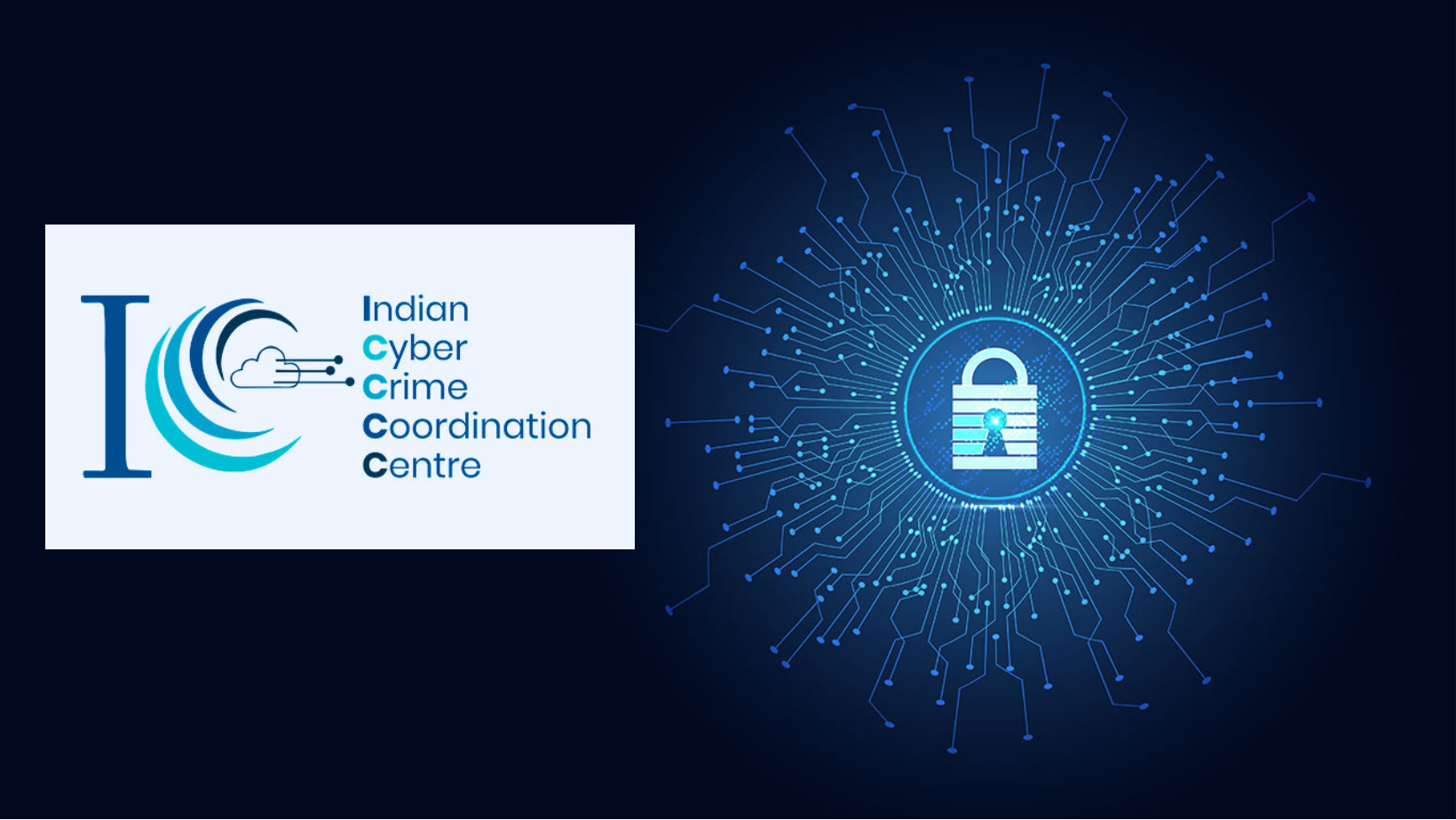
- 15 May 2024
Why is it in the News?
The Indian Cyber Crime Coordination Centre (I4C), in collaboration with Microsoft, has blocked more than 1,000 Skype IDs involved in blackmail, extortion, and “digital arrests” by cybercriminals posing as police and law enforcement authorities.
About Indian Cyber Crime Coordination Centre (I4C):
- The Indian Cyber Crime Coordination Centre (I4C) is a comprehensive initiative to address cybercrime in India.
- It has been established under the Ministry of Home Affairs (MHA) Govt. of India.
- With a focus on improving coordination between various Law Enforcement Agencies (LEAs) and stakeholders, I4C serves as a nodal point in the fight against cybercrime.
- It is located in New Delhi.
Its primary functions include:
- Acting as the central hub for tackling cybercrime and coordinating efforts among LEAs.
- Identifying research needs and collaborating with academia and research institutes within India and abroad to develop new technologies and forensic tools.
- Preventing the misuse of cyberspace by extremist and terrorist groups.
- Suggesting amendments to cyber laws to keep pace with evolving technologies and fostering international cooperation.
- Coordinating activities related to the implementation of Mutual Legal Assistance Treaties (MLAT) with other countries concerning cybercrimes, in consultation with the concerned nodal authority in MHA.
Key Components of the Indian Cyber Crime Coordination Centre (I4C):
- The I4C is comprised of several specialized units designed to tackle various aspects of cybercrime:
- National Cybercrime Threat Analytics Unit (TAU): Regularly reports on cybercrime threats and provides crucial insights to support the nation's cybersecurity efforts.
- National Cybercrime Reporting Portal (NCRP): Offers a unified platform for citizens to report various cybercrime complaints around the clock from anywhere in India.
- National Cybercrime Training Centre (NCTC): Imparts essential training to government officials, primarily focusing on state law enforcement agencies.
- National Cybercrime Research and Innovation Centre: Conducts research and develops indigenous tools for preventing cybercrimes.
- Platform for Joint Cyber Crime Coordination Team: Facilitates coordination, sharing of cybercrime modus operandi, and data/information exchange among state/UT LEAs.
- Cybercrime Ecosystem Management Unit: Focuses on creating mass awareness regarding cyber hygiene and prevention of cybercrimes.
- National Cybercrime Forensic Laboratory (Investigation) Ecosystem: Assists LEAs in cyber forensics investigations.
- In addition to these components, the I4C also fosters collaboration between academia, industry, the public, and government entities in the prevention, detection, investigation, and prosecution of cybercrimes.
- Through the Cyber Crime Volunteers Program, the I4C unites passionate citizens who are committed to serving the nation and contributing to the fight against cybercrime.
Convention on Biological Diversity (CBD)
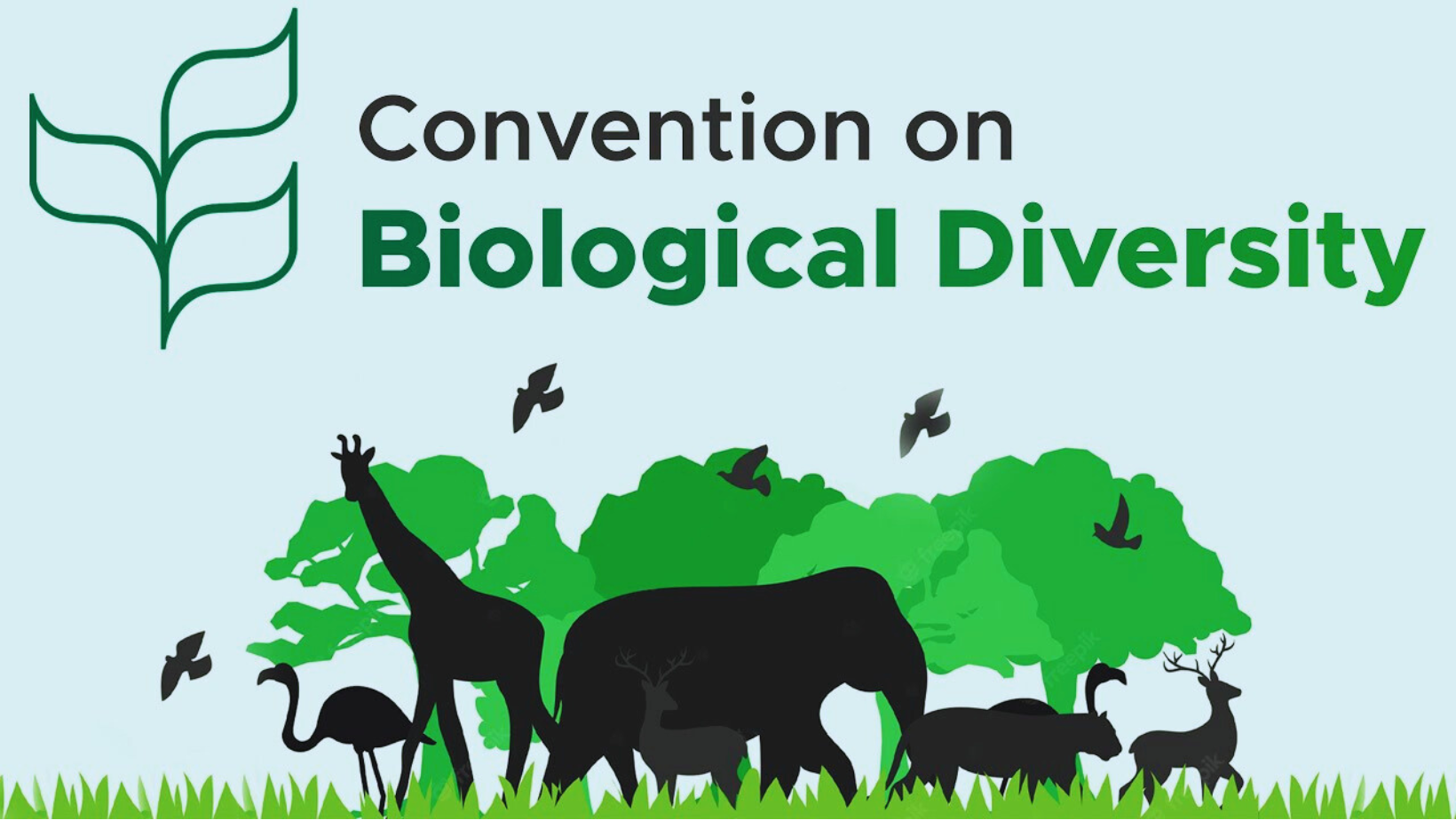
- 14 May 2024
Why is it in the News?
Technical experts from across the world are gathered at the United Nations headquarters in Kenya in preparation for the 16th Conference of Parties to the Convention on Biological Diversity (COP16).
About the Convention on Biological Diversity (CBD):
- The Convention on Biological Diversity (CBD), known informally as the Biodiversity Convention, is a multilateral treaty that has the main objective of developing national strategies for the conservation and sustainable use of biological diversity.
- It is a multilateral treaty established in 1992 at the United Nations Conference on Environment and Development (also known as the Earth Summit) held in Rio de Janeiro, Brazil.
- Signed by 150 government leaders, the Convention on Biological Diversity is dedicated to promoting sustainable development.
- Conceived as a practical tool for translating the principles of Agenda 21 into reality, the Convention recognizes that biological diversity is about more than plants, animals and microorganisms and their ecosystems – it is about people and our need for food security, medicines, fresh air and water, shelter, and a clean and healthy environment in which to live.
The CBD has so far produced two important international agreements:
- The Cartagena Protocol on biosafety entered into force in 2003, seeks to protect the environment from the potential risks of Genetically Modified (GM) organisms.
- The Cartagena Protocol on Biosafety to the Convention on Biological Diversity is an international treaty governing the movements of living modified organisms (LMOs) resulting from modern biotechnology from one country to another.
- It aims to ensure the safe handling, transport, and use of living-modified organisms (LMOs) that may have adverse effects on biological diversity, taking into account human health, especially focusing on transboundary movements.
- The protocol was adopted in January 2000 in Cartagena, Colombia, and entered into force on September 11, 2003.
- The Nagoya Protocol on Access to Genetic Resources entered into force in 2014, aims at sharing the benefits arising from the utilisation of genetic resources in a fair and equitable way.
- The Nagoya Protocol on Access to Genetic Resources and the Fair and Equitable Sharing of Benefits Arising from their Utilization is a supplementary agreement to the Convention on Biological Diversity.
- It provides a legal framework for the fair and equitable sharing of benefits arising from the utilization of genetic resources, with a particular focus on ensuring that benefits are shared with the countries and communities that provide those resources.
- The protocol aims to promote the conservation and sustainable use of biodiversity while also respecting the rights of indigenous and local communities over their traditional knowledge and genetic resources.
- It was adopted in Nagoya, Japan, in 2010 and entered into force in 2014.
- The Conference has also implemented many positive decisions that have contributed to the promotion of environmental integrity and the rights of Indigenous Peoples and Local Communities.
- In 2010, the conference in Nagoya adopted a Strategic Plan for Biodiversity, including the Aichi Biodiversity Targets for the 2011-2020 period.
- The convention provides a framework for member countries to develop national strategies and action plans for the conservation and sustainable use of biological diversity.
- As of now, 196 countries have ratified the convention, making it a widely accepted and crucial international agreement for addressing global environmental issues.
Silk Cotton Tree
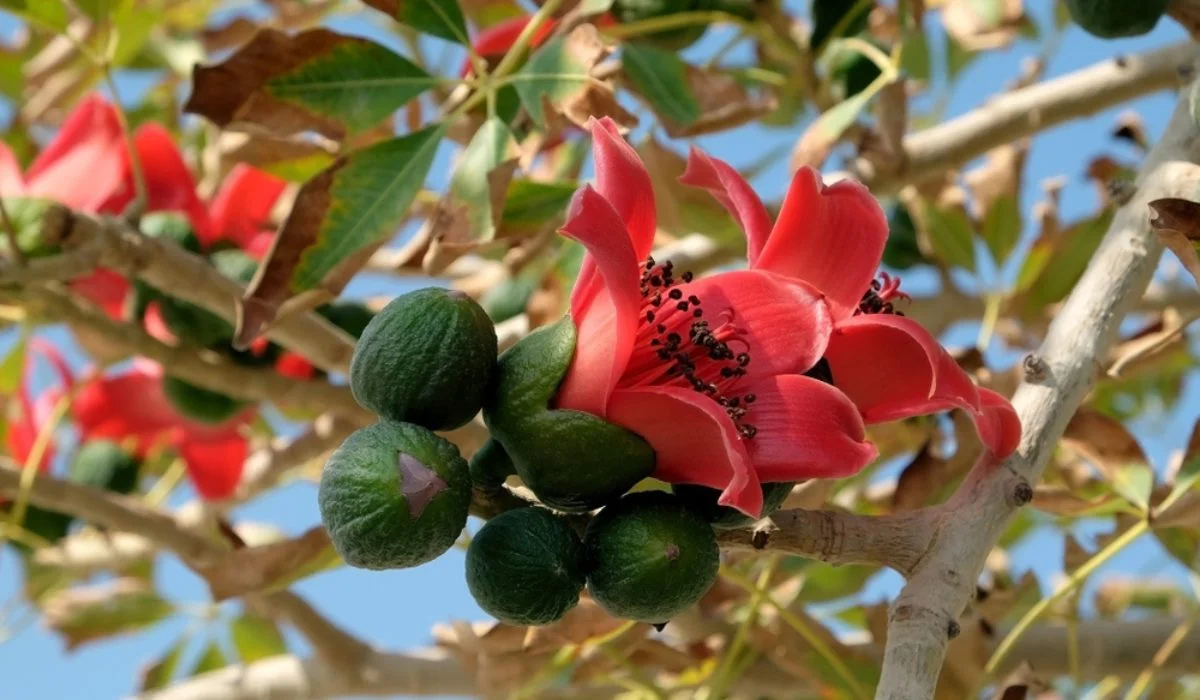
- 14 May 2024
Why is it in the News?
Silk cotton trees are dwindling in south Rajasthan, triggering a chain of detrimental effects on both the forests and the local populace in the region.
About Silk Cotton Tree:
- The silk cotton tree, or the semal tree is a type of native cotton tree with large red flowers.
- The genus name Salmalia is derived from the Sanskrit name Shaalmali.
- Silk cotton trees comprise eight species in the genus Bombax, native to India, tropical southern Asia, northern Australia and tropical Africa.
- These trees bear beautiful red-coloured flowers from January to March and the fruit on maturity appears during March and April.
- These are full of cotton-like fibrous stuff.
- It is for the fibre that villagers gather the semul fruit and extract the cotton substance called "kopak".
- This substance was once used for stuffing pillows, sofas and mattresses.
- The fruit is cooked and eaten and also pickled.
- Semul is quite a fast-growing tree and can attain a girth of 2 to 3 m, and a height of about 30 m, in nearly 50 years or so.
- It thrives in moist deciduous and semi-evergreen forests, as well as in plains, with occasional sightings in coastal areas and up to 1400 m in hilly regions.
- The tree is not particularly frost-tolerant and may get damaged by prolonged exposure to cold temperatures.
- Among the Garasia tribe in Rajasthan, the tree holds cultural significance, with some believing their lineage traces back to semal trees.
Distribution:
- Its distribution spans across various regions in India, including Andaman & Nicobar Island, Assam, Bihar, Kerala, Madhya Pradesh, Maharashtra, Odisha, Punjab, Rajasthan, and Uttar Pradesh.
Importance of the Tree:
- The tree's importance lies in its resistance to fire and its renowned cooling properties, making it valuable for land reclamation efforts.
- It generates abundant biomass each season and aids in carbon sequestration by shedding leaves before flowering.
- The late flowering of the small tree is considered by some researchers as a potential indicator of a hot summer or delayed monsoon.
- The silk cotton tree is known for its medicinal properties.
- The tree’s bark, leaves, and seeds are utilised in traditional medicine to cure various ailments, including fever, diarrhoea and skin conditions.
- The tree is also used as a natural remedy for wounds and cuts.
- The tree also serves as a habitat for rock bees, as its spikes deter sloth bears, and its reddish roots are consumed by tribal communities during the monsoon.
- Furthermore, it offers opportunities for agroforestry and provides essential resources like food, fodder, and fuelwood, with its wood being used by various tribes for crafting musical instruments and utensils.
OpenAI’s GPT-4o
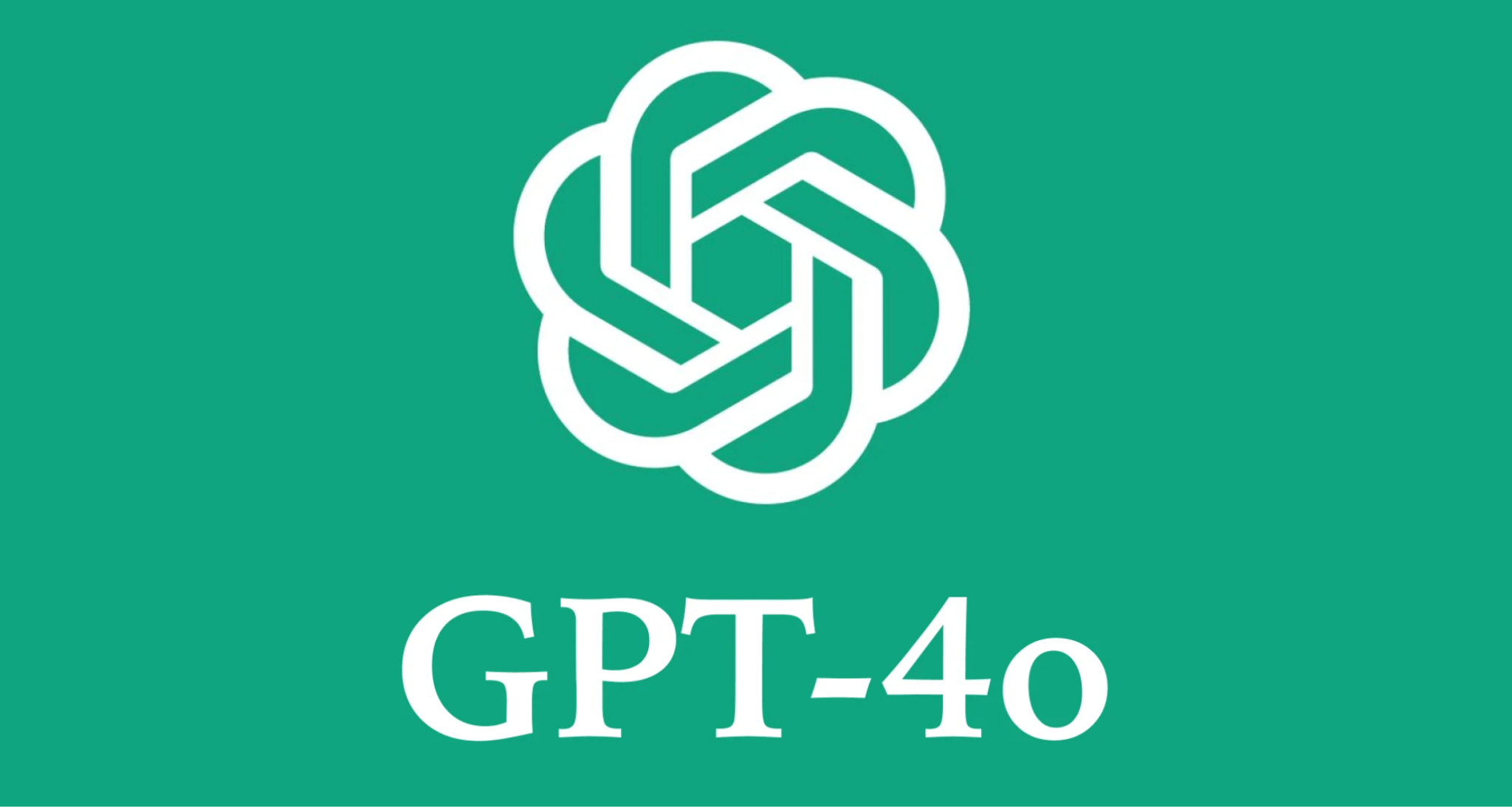
- 14 May 2024
Why is it in the News?
OpenAI introduced its latest large language model (LLM) called GPT-4o recently, billing it as its fastest and most powerful AI model so far.
What is GPT-4o?
- GPT-4o (“o” stands for “Omni”) is a revolutionary AI model by OpenAI, which has been developed to enhance human-computer interactions.
- It lets users input any combination of text, audio, and image and receive responses in the same formats.
- This makes GPT-4o a multimodal AI model – a significant leap from previous models.
- GPT-4o is like a digital personal assistant that can assist users with a variety of tasks.
- From real-time translations to reading a user’s face and having real-time spoken conversations, this new model is far ahead of its peers.
- GPT-4o is capable of interacting using text and vision, meaning it can view screenshots, photos, documents, or charts uploaded by users and have conversations about them.
- The new updated version of ChatGPT will also have updated memory capabilities and will learn from previous conversations with users.
What is the technology behind GPT-4o?
- LLMs are the backbone of AI chatbots. Large amounts of data are fed into these models to make them capable of learning things themselves.
- A large language model (LLM) is a computer program that learns and generates human-like language using a transformer architecture trained on vast text data.
- Large Language Models (LLMs) are foundational machine learning models that use deep learning algorithms to process and understand natural language.
- These models are trained on massive amounts of text data to learn patterns and entity relationships in the language.
- LLMs can perform many types of language tasks, such as translating languages, analyzing sentiments, chatbot conversations, and more.
- They can understand complex textual data, identify entities and relationships between them, and generate new text that is coherent and grammatically accurate.
What are GPT-4o’s limitations and safety concerns?
- GPT-4o is still in the early stages of exploring the potential of unified multimodal interaction, meaning certain features like audio outputs are initially accessible in a limited form only, with preset voices.
- Further development and updates are necessary to fully realise its potential in handling complex multimodal tasks seamlessly.
- Regarding safety, GPT-4o comes with built-in safety measures, including “filtered training data and refined model behaviour post-training”.
International Bullion Exchange (IIBX)

- 14 May 2024
Why is it in the News?
The State Bank of India (SBI) recently announced that it has secured the distinction of being the first bank to become a trading-cum-clearing (TCM) Member of the India International Bullion Exchange at the GIFT City in Gujarat.
What is the International Bullion Exchange (IIBX)?
- India International Bullion Exchange (IIBX) is India's first International Bullion Exchange.
- It is situated within the Gujarat International Finance Tech City (GIFT City) IFSC in Gandhinagar, Gujarat.
- Conceptualized to serve as a premier platform for importing bullion into India, IIBX aims to establish a world-class ecosystem for bullion trading, fostering investment in bullion financial products, and providing top-tier vaulting facilities.
What is Bullion?
- Bullion refers to high-purity physical gold and silver, typically stored in the form of bars, ingots, or coins.
- While sometimes recognized as legal tender, bullion primarily serves as a reserve for central banks and institutional investors.
Key Features:
- Transparent Price Discovery: IIBX prioritizes transparent price discovery mechanisms, ensuring fair and equitable transactions.
- Responsible Sourcing and Supply Chain Integrity: Emphasizing ethical practices, IIBX upholds responsible sourcing and supply chain integrity standards.
- Quality Assurance and Standardization: IIBX maintains rigorous quality assurance protocols and standardized practices to uphold the integrity of traded bullion.
Regulation and Oversight:
- Under the governance of the International Financial Services Centers Authority (IFSCA), IIBX operates under a unified regulatory framework dedicated to the development and oversight of financial products, services, and institutions within IFSCs.
Competitive Advantage:
- Offering a diverse array of products and cutting-edge technology, IIBX provides cost-effective solutions unparalleled by Indian exchanges and global counterparts in major financial hubs like Hong Kong, Singapore, Dubai, London, and New York.
What is the International Financial Services Centers Authority (IFSCA)?
- The International Financial Services Centers Authority (IFSCA) is a regulatory body established in India to oversee and regulate financial products, services, and institutions operating within International Financial Services Centers (IFSCs).
- IFSCA was formed to develop and promote the financial ecosystem within IFSCs, ensuring compliance with international standards and best practices.
- It regulates various entities such as banking, insurance, securities markets, and other financial intermediaries to foster growth and innovation in the financial sector within IFSCs.
- IFSCA's jurisdiction includes Gujarat International Finance Tech City (GIFT City) IFSC in Gandhinagar, Gujarat, which serves as a hub for international financial activities in India.
United Nations Office on Drugs and Crime (UNDOC)
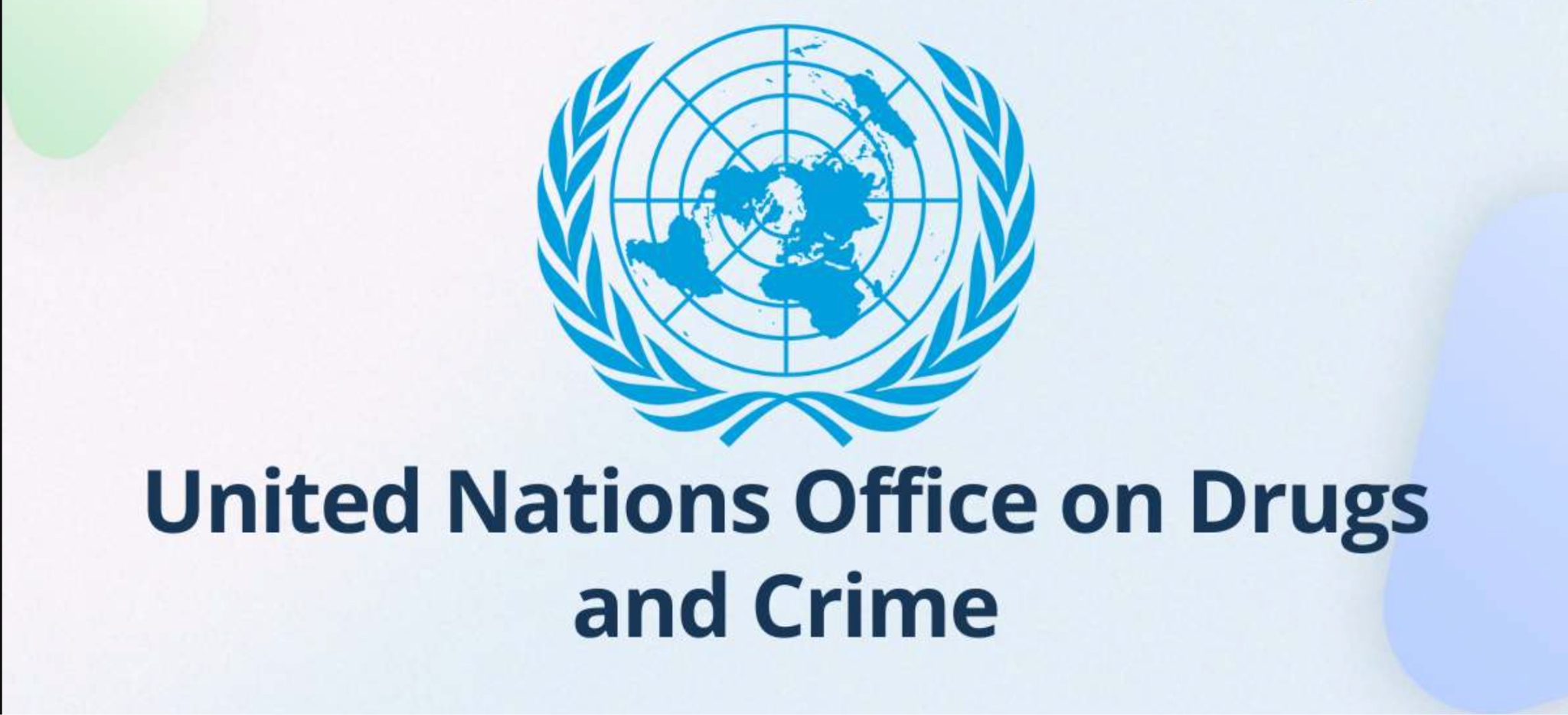
- 14 May 2024
Why is it in the News?
The United Nations Office on Drugs and Crime released the 2024 World Wildlife Crime Report on May 13, 2024.
About the United Nations Office on Drugs and Crime (UNODC):
- The United Nations Office on Drugs and Crime (UNODC) is a global organization that operates under the umbrella of the United Nations and serves as a leading authority in the fight against illicit drugs, organized crime, corruption, and terrorism.
- UNODC works to promote justice, security, and integrity in various areas related to crime prevention and criminal justice.
Objectives:
- The primary objectives of UNODC are to assist member states in their efforts to combat drug trafficking, reduce drug abuse and its associated health and social consequences, dismantle transnational organized criminal networks, prevent and address corruption, counter terrorism, and promote the rule of law and effective criminal justice systems.
History of UNODC:
- It was established in 1997 through the merger of two precursor entities:
- The United Nations Drug Control Programme (UNDCP) - It was founded in 1991 as a response to the growing global drug problem.
- Its primary focus was to coordinate and support international efforts in combating illicit drug production, trafficking, and drug abuse.
- The Centre for International Crime Prevention (CICP) - The CICP, established in 1992, aimed to address a broader range of transnational crimes, including organized crime, corruption, and terrorism.
- The United Nations Drug Control Programme (UNDCP) - It was founded in 1991 as a response to the growing global drug problem.
- The merger of these two entities resulted in the creation of UNODC, which brought together expertise and resources in the fields of drug control and crime prevention under a unified structure.
- Since its inception, UNODC has expanded its mandate and activities to encompass a wide range of global challenges related to drugs, crime, corruption, and terrorism.
The mandate of UNODC:
- The mandate of UNODC is derived from several United Nations General Assembly resolutions and international conventions.
- The organization operates within the framework of the United Nations principles and aims to support member states in implementing these conventions and addressing the various aspects of crime and drug-related challenges.
Funding:
- It relies on voluntary contributions, mainly from governments, to carry out the majority of our work.
- Headquarters: Vienna, Austria
The Main Areas of UNODC's:
- Fighting Drugs: Implementing global drug control conventions, aiding in prevention and treatment, disrupting trafficking networks, and fostering international cooperation.
- Tackling Organized Crime: Helping states build legal frameworks, dismantle criminal networks, strengthen border control, and analyze emerging threats.
- Anti-Corruption Efforts: Supporting UNCAC implementation, establishing commissions, recovering stolen assets, and promoting integrity in public and private sectors.
- Strengthening Criminal Justice: Enhancing law enforcement, judiciary, and prison systems, improving access to justice, supporting rehabilitation, and promoting international legal standards.
- Combating Terrorism: Assisting in legal frameworks, enhancing law enforcement capacities, countering terrorist financing, and addressing online radicalization.
- Addressing Human Trafficking and Migrant Smuggling: Developing strategies, strengthening legislation, aiding victim protection, and fostering international cooperation.
What is the World Wildlife Crime Report?
- The World Wildlife Crime Report, now in its third edition (2024), continues the tradition established by earlier editions published in 2016 and 2020.
- It delves into trends related to the illegal trafficking of protected wildlife species, providing comprehensive analyses of the harms and impacts of wildlife crime.
- Furthermore, it investigates the driving factors behind wildlife trafficking trends and assesses the effectiveness of various interventions aimed at addressing this complex issue.
Xenotransplantation
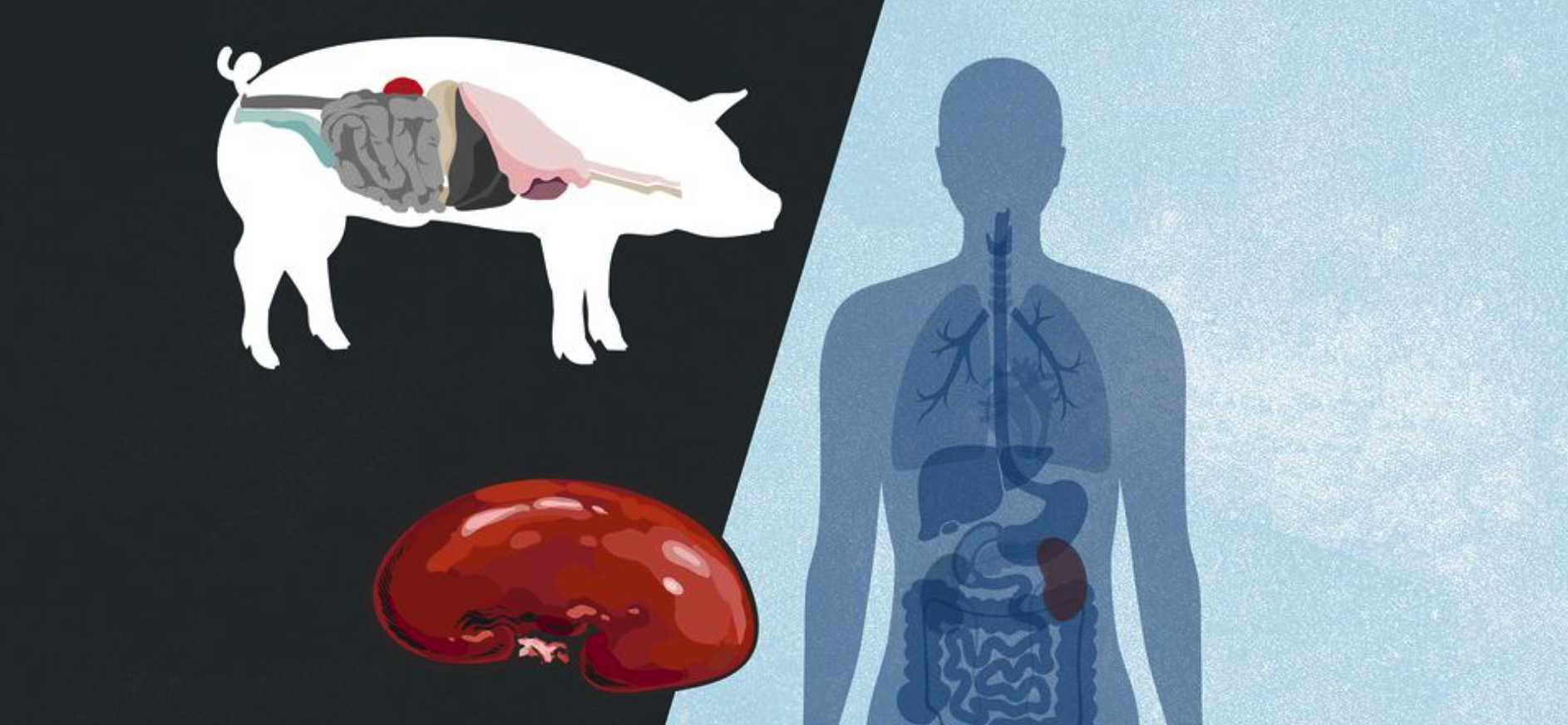
- 13 May 2024
Why is it in the News?
The first recipient of a modified pig kidney transplant passed away recently, around two months after the surgery was carried out.
What is Xenotransplantation?
- Xenotransplantation is the transplantation of organs from different species, such as pigs to humans.
- It is a procedure that involves the transplantation, implantation or infusion into a human recipient of either (a) live cells, tissues, or organs from a nonhuman animal source, or (b) human body fluids, cells, tissues or organs that have had ex vivo contact with live nonhuman animal cells, tissues or organs.
- Essentially, it is the use of animal cells and organs to heal humans.
- Xenotransplantation involving the heart was first tried in humans in the 1980s.
- The need for such a procedure was felt because of the significant gap between the number of transplants needed by patients and the availability of donor organs.
How Does Xenotransplantation Happen?
- The process of implanting a pig kidney into a recipient is akin to a standard transplant procedure, including the use of post-surgery immunosuppressant drugs.
- However, several critical additional steps are involved.
- Firstly, the chosen animal organ undergoes genetic modifications to prevent rejection by the human body.
- Using CRISPR-Cas9 gene editing technology, specific pig genes responsible for producing antibodies reactive to the human immune system are removed. Simultaneously, certain human genes are introduced to enhance the kidney's compatibility with human recipients.
- Even after the surgery, vigilant monitoring is essential to assess the body's response to the transplanted organ.
Why are pigs often used for xenotransplantation?
- Pig heart valves have been used to replace damaged valves in humans for over 50 years now.
- The pig’s anatomical and physiological parameters are similar to those of humans, and the breeding of pigs on farms is widespread and cost-effective.
- Also, many varieties of pig breeds are farmed, which provides an opportunity for the size of the harvested organs to be matched with the specific needs of the human recipient.
What are the Complications of Xenotransplantation?
- Rejection: Despite genetic modifications, the recipient's immune system may still recognize the transplanted organ as foreign and mount an immune response, leading to rejection.
- Infection: Xenotransplantation introduces the risk of transmitting infectious diseases from the donor animal to the recipient, including viruses and bacteria that may not typically affect humans.
- Immunological Challenges: The interaction between the recipient's immune system and the transplanted organ may trigger inflammatory responses, leading to complications such as inflammation and tissue damage.
- Ethical Concerns: Xenotransplantation raises ethical dilemmas related to animal welfare, genetic engineering, and the potential exploitation of animals for human benefit.
- Long-term Health Risks: The long-term effects of xenotransplantation on recipient health, including the development of chronic conditions and the risk of cancer, are still not fully understood and require further research.
Vibrant Village Programme (VVP)
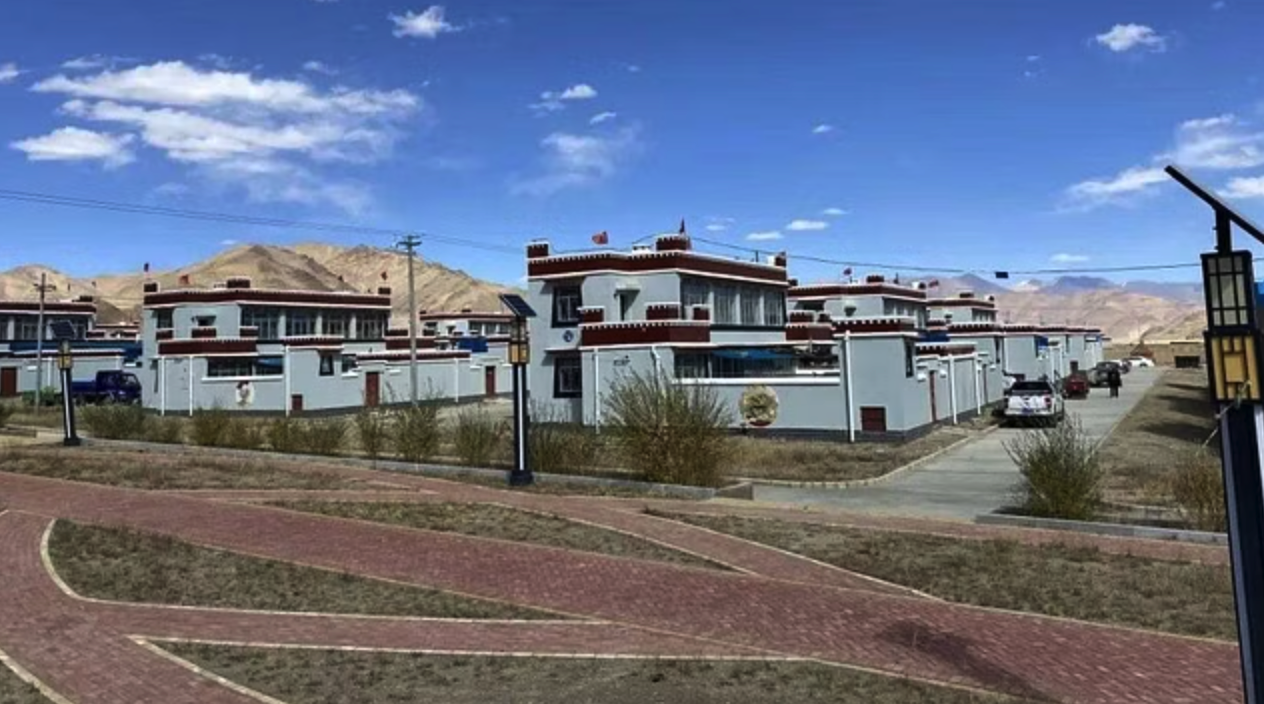
- 13 May 2024
Why is it in the News?
The government is likely to spend over ?2 crore on each kilometre of road to be constructed along the China border in Uttarakhand and Sikkim under the Vibrant Village Programme (VVP), according to the project’s details.
What is the Vibrant Villages Programme (VVP)?
- Vibrant Villages Programme (VVP) is a Centrally Sponsored Scheme approved on 15th February 2023 for the financial years 2022-23 to 2025-26.
Objective:
- For comprehensive development of the select villages in 46 blocks in 19 districts abutting the northern border in the States of Arunachal Pradesh, Himachal Pradesh, Sikkim, Uttarakhand and UT of Ladakh.
- It will aid in raising the standard of living for residents of designated border communities and encouraging them to remain there, reversing the outmigration from these villages and enhancing border security.
- Action plans for identified villages would be prepared by the district administration with assistance from the proper mechanisms at the block and panchayat levels, in order to guarantee complete saturation of federal and state programmes.
- Road connectivity, drinking water, power (including solar and wind energy), mobile and internet access, tourist attractions, multipurpose facilities, healthcare infrastructure, and wellness centres are the intervention areas with the highest priority for village development.
Scheme implementation:
- Scheme implementation involves identifying and fostering economic drivers in border villages along the northern border, following a "Hub and Spoke Model" to establish growth centres.
- This includes promoting social entrepreneurship, empowering youth and women through skill development and entrepreneurship, leveraging local tourism potential, preserving cultural heritage, and fostering sustainable eco-agribusinesses.
- Vibrant Village Action Plans will be developed by district administrations in collaboration with Gram Panchayats, ensuring full coverage of Central and state schemes.
Expected outcomes:
- Key outcomes that have been attempted are connectivity with all-weather roads, drinking water, 24x7 electricity – Solar and wind energy to be given focussed attention, and mobile and internet connectivity.
- Tourist centres, multi-purpose centres and health and wellness Centers.
Rat-Hole Mining
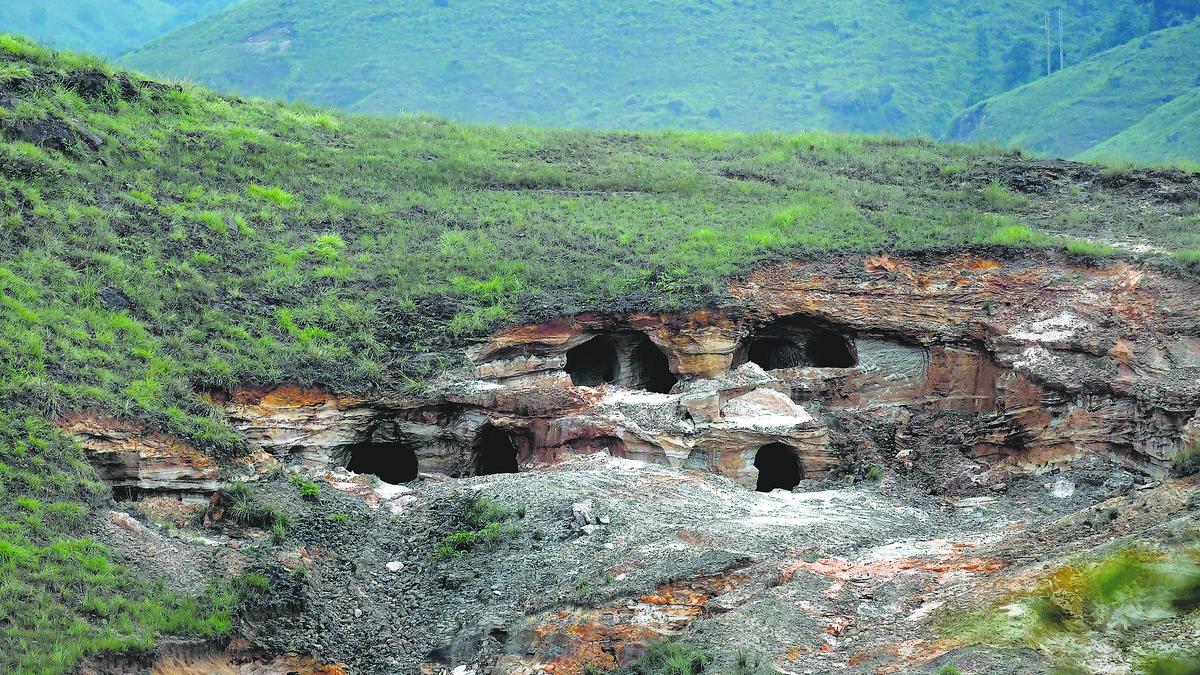
- 13 May 2024
Why is it in the News?
A one-member panel appointed by the High Court of Meghalaya to handle coal-related issues has flagged the lack of progress in restoring the environment damaged by rat-hole coal mining in the northeastern State.
What is Rat-hole Mining?
- Coal reserves are concentrated in Eastern India, spanning states such as Telangana, Madhya Pradesh, Maharashtra, Jharkhand, Chhattisgarh, and West Bengal, with significant deposits also found in the North-Eastern regions like Assam and Meghalaya.
- However, commercial mining isn't prevalent in the North-East due to unsuitable terrain and the nature of coal deposits.
- Open mining faces additional challenges, and the coal in this region often contains high sulfur content, reducing energy efficiency and classifying it as low-quality coal.
- A rat-hole mine involves digging of very small tunnels, usually only 3-4 feet deep, in which workers, more often children, enter and extract coal.
- Once the pits are dug, miners descend using ropes or bamboo ladders to reach the coal seams.
- The coal is then manually extracted using primitive tools such as pickaxes, shovels, and baskets.
- A major portion of these employees are children, who are preferred because of their thin body shape and ease of accessing depths.
- This practice has become very popular in Meghalaya.
- Here there are majorly hilly terrains, which make coal mining very difficult.
- Also, digging a big hole is very difficult because a big hole demands pillars and support.
- Since it’s a good opportunity to extract coal from there for big as well as local investors, because it involves less investment and good returns, people are drawn towards this dangerous business.
- The practice is to not make any professional tunnels, install pillars, and ensure safety measures, but to just dig a small tunnel and put children and labour to work.
- Rat-hole mining is primarily practised only in Meghalaya.
- Such cases are not witnessed in Jharkhand and Chhattisgarh because the coal seems to be thick in Jharkhand and Chhattisgarh while in Meghalaya coal seems to be very thin.
- So, economically it is not a good idea to do open mining, and therefore, they prefer rat-hole mining.
Types of rat-hole mining:
- The rat-hole mining is broadly of two types.
- In the side-cutting procedure, narrow tunnels are dug on the hill slopes and workers go inside until they find the coal seam.
- In the other type of rat-hole mining, called box-cutting, a rectangular opening is made, varying from 10 to 100 sqm, and through that a vertical pit is dug, 100 to 400 feet deep.
- Once the coal seam is found, rat-hole-sized tunnels are dug horizontally through which workers can extract the coal.
Environmental and Safety Concerns:
- Since rat-hole mining is illegal, it is practised behind closed doors, and therefore, no one is ready to invest in infrastructure development.
- Coal is stored near rivers because of a shortage of space which leads to pollution around water bodies.
- The water in the Kopili River (which flows through Meghalaya and Assam) has turned acidic.
- The entire roadsides in and around mining areas are for piling coal.
- This is a major source of air, water and soil pollution.
- Off-road movement of trucks and other vehicles in the area causes further damage to the ecology of the area.
- Due to rat-hole mining, during the rainy season, water gets flooded into the mining areas resulting in the death of many workers due to suffocation and hunger.
- If water has seeped into the cave, the worker can enter only after the water is pumped out.
- Also, the mines are typically unregulated, lacking safety measures such as proper ventilation, structural support, or safety gear for the workers.
When Was It Banned?
- The National Green Tribunal (NGT) banned rat-hole mining in 2014 and retained the ban in 2015.
- The ban was on grounds of the practice being unscientific and unsafe for workers.
- The NGT order bans not only rat-hole mining but all “unscientific and illegal mining.”
- But orders of the Tribunal have been violated without exception since The State Government has failed to check illegal mining effectively.
Caenorhabditis Elegans
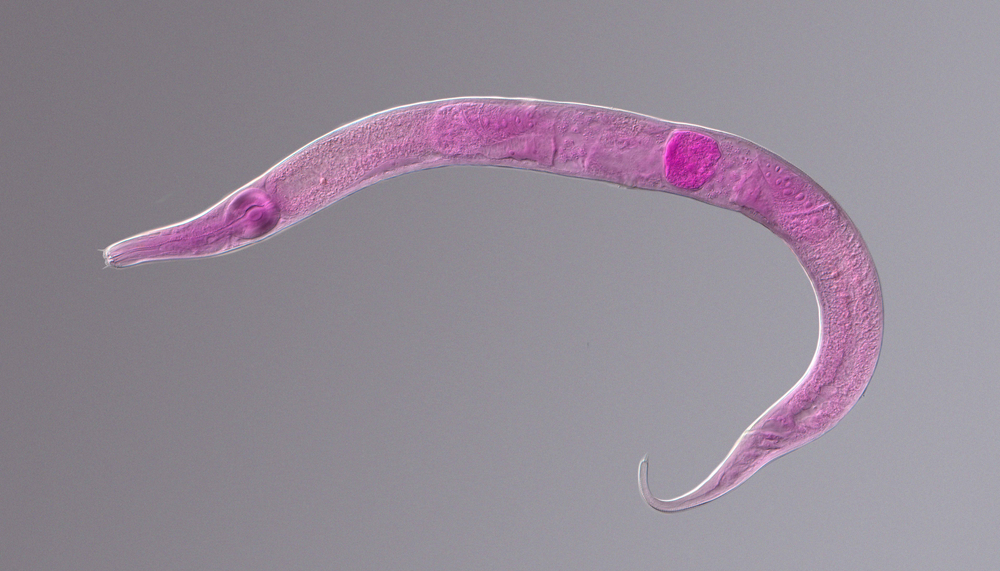
- 13 May 2024
Why is it in the News?
Researchers found that after C. elegans worms ate a disease-causing bacteria, its children knew from birth to avoid making the same mistake.
What is Caenorhabditis Elegans?
- Caenorhabditis elegans is a small, free-living roundworm (nematode) that is widely used as a model organism in various fields of biological research, including genetics, developmental biology, neuroscience, and ageing.
- It was initially discovered in the soil of a nematode-infested plant in the city of Bristol, England, in the early 20th century.
C. elegans has several characteristics that make it an ideal model organism:
- Simple anatomy: The adult hermaphrodite worm consists of precisely 959 cells, allowing for a detailed understanding of its cellular anatomy.
- Rapid life cycle: The worm's life cycle, from fertilized egg to mature adult, takes only about 3 days at 20°C.
- Transparent body: The transparency of its body enables researchers to observe cellular structures and processes directly under a microscope.
- Ease of genetic manipulation: C. elegans is highly responsive to genetic manipulation techniques, facilitating the study of gene function and the effects of mutations.
- Research on C. elegans has led to groundbreaking discoveries, including insights into the molecular basis of cell death, the regulation of gene expression, and the neural basis of behaviour.
- These findings have provided valuable knowledge that can be applied to understanding the biology of more complex organisms, including humans.
What are Nematodes?
- Nematodes are long, thin round worms, so tiny that they can usually only be seen under the microscope.
- Nematodes are incredibly abundant organisms found in various environments worldwide.
- They can be parasites of animals and plants or exist as free-living organisms in soil, freshwater, marine habitats, and even unconventional places like vinegar and beer malts.
- These bilaterally symmetrical creatures are elongated with tapered ends and may possess a pseudocoel, a fluid-filled body cavity.
- Nematodes are ubiquitous, inhabiting diverse ecosystems ranging from deserts and swamps to oceans and even Antarctica.
- In animals, they commonly parasitize organs such as the alimentary, circulatory, and respiratory systems.
ASEAN-India Trade in Goods Agreement (AITIGA)

- 13 May 2024
Why is it in the News?
The 4th joint committee meeting for the review of AITIGA (ASEAN-India Trade in Goods Agreement) was held in Putrajaya, Malaysia recently.
About ASEAN-India Trade in Goods Agreement (AITIGA):
- The ASEAN-India Trade in Goods Agreement (AITIGA) is a trade deal between the ten member states of ASEAN and India.
- ASEAN and India signed the Agreement at the 7th ASEAN Economic Ministers-India Consultations in Bangkok, Thailand in 2009.
- The Agreement, which came into effect in 2010, is sometimes referred to as the ASEAN-India Free Trade Agreement.
- The Agreement has led to steadily increasing trade between ASEAN and India since its signing.
- In 2019-20, trade between India and ASEAN was worth US$86 billion.
- Though this represented a decline from US$97 billion in 2018-19 because of the COVID-19 pandemic, it was an increase from US$81.3 billion in the 2017-18 financial year.
- It covers trade in physical goods and products and it does not apply to trade in services.
- ASEAN and India signed a separate ASEAN-India Trade in Services Agreement in 2014.
About the Association of the Southeast Asian Nations (ASEAN):
- The Association of the Southeast Asian Nations (ASEAN) is a geopolitical and economic organization established to accelerate economic growth, social progress and cultural development among its ten (10) member states.
- It also aims to promote peace and stability in the region, active collaboration and mutual assistance on matters of common interest, Southeast Asian studies, and maintain close and beneficial cooperation with other regional and international organizations.
- It was established on 8 August 1967 in Bangkok, Thailand with the signing of the ASEAN Declaration by the founding members of ASEAN, namely Indonesia, Malaysia, the Philippines, Singapore and Thailand.
- Brunei Darussalam then joined in 1984, Viet Nam in 1995, Lao PDR and Myanmar in 1997, and Cambodia in 1999, making up the current 10 Member States of ASEAN.
- The ASEAN Secretariat was set up in February 1976 and is based in Jakarta, Indonesia.
PS4 Engine
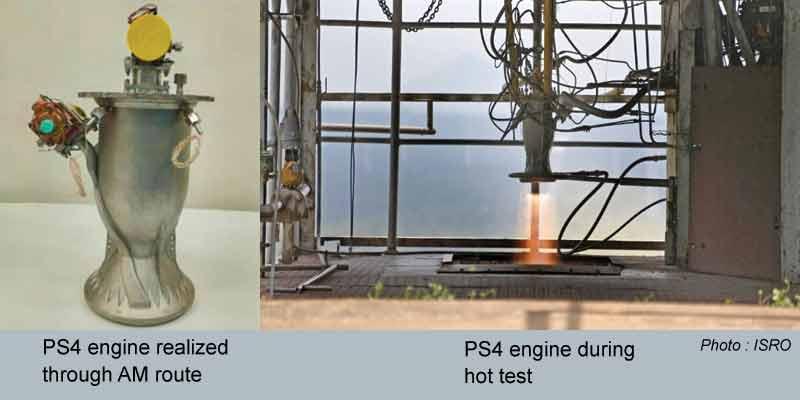
- 11 May 2024
Why is it in the News?
Recently, the Indian Space Research Organisation (ISRO) successfully tested a liquid rocket engine made with the help of additive manufacturing technology — commonly known as 3D printing.
About PS4 Engine:
- ISRO has successfully conducted a long-duration test of its PS4 engine, re-designed for production using cutting-edge additive manufacturing (AM) techniques, also known in common parlance as 3D printing, and crafted in the Indian industry.
- The PS4 engine is the uppermost stage of the Polar Satellite Launch Vehicle (PSLV), comprising two Earth-storable liquid engines.
- The engine uses the earth-storable bipropellant combinations of Nitrogen Tetroxide as oxidiser and Mono Methyl Hydrazine as fuel in pressure-fed mode.
- It was developed by ISRO's Liquid Propulsion Systems Centre (LPSC).
- LPSC redesigned the engine making it amenable to the Design for Additive Manufacturing (DfAM) concept thereby gaining considerable advantages.
- It was developed by ISRO's Liquid Propulsion Systems Centre (LPSC).
- The manufacturing of the engine was done by the Indian industry partner, Wipro 3D, and the engine was hot tested at ISRO Propulsion Complex, Mahendragiri, Tamil Nadu.
Why did ISRO use 3D printing to build the PS4 engine?
- The technology helped ISRO bring down the number of parts in the engine from 14 to a single piece.
- The space agency was able to eliminate 19 weld joints and saved 97% of the raw material.
- It also reduced the overall production time by 60%.
What is 3D Printing?
- 3D printing is a process that uses computer-created design to make three-dimensional objects layer by layer.
- It is an additive process, in which layers of a material like plastic, composites or bio-materials are built up to construct objects that range in shape, size, rigidity, and colour.
How is 3D printing done?
- To carry out 3D printing, one needs a personal computer connected to a 3D printer.
- All they need to do is design a 3D model of the required object on computer-aid design (CAD) software and press ‘print’.
- The 3D printer does the rest of the job.
- 3D printers construct the desired object by using a layering method, which is the complete opposite of the subtractive manufacturing processes.
- The (3D) printers act generally the same as a traditional inkjet printer in the direct 3D printing process, where a nozzle moves back and forth while dispensing a wax or plastic-like polymer layer-by-layer, waiting for that layer to dry, then adding the next level.
- It essentially adds hundreds or thousands of 2D prints on top of one another to make a three-dimensional object.
- Notably, these machines are capable of printing anything from ordinary objects like a ball or a spoon to complex moving parts like hinges and wheels.
- We can print a whole bike, handlebars, saddle, frame, wheels, brakes, pedals and chain–ready assembled, without using any tools.
- It’s just a question of leaving gaps in the right places.
Heatstroke

- 11 May 2024
Why is it in the News?
The Union Health Ministry has issued standardised guidelines for confirming heatstroke and heat-related deaths in the country.
What is a Heatstroke?
- Heatstroke, also known as sunstroke, is a medical emergency resulting from the body overheating due to exposure to high temperatures and humidity or prolonged physical exertion in hot conditions.
- Individuals experiencing heat exhaustion may exhibit symptoms such as fatigue, dizziness, headache, nausea, vomiting, low blood pressure, and increased heart rate.
Criteria for Heatstroke:
- Heatstroke is characterized by body temperatures of 40°C (104°F) or higher, accompanied by delirium, seizures, or coma, posing a potentially fatal condition.
Heatstroke Deaths in India:
- According to analysis of data from the National Crime Records Bureau, over 11,000 people in India died due to heatstroke between 2012 and 2021.
Government Initiatives:
- The Health Ministry released a National Action Plan on Heat-Related Illness in July 2021, outlining strategies to address health challenges posed by heat waves.
- The India Cooling Action Plan (ICAP) aims to mitigate heat impacts by ensuring sustainable cooling and thermal comfort for all by 2037-38.
First Aid Measures for Heatstroke:
-
- Move the affected person to a cool, shaded area.
- Offer water or a rehydrating drink if the person is conscious.
- Fan the person to promote cooling.
- Seek medical attention if symptoms worsen, persist, or if the person loses consciousness.
- Avoid giving alcohol, caffeine, or carbonated beverages.
- Apply a cool, wet cloth to the person's face or body.
- Loosen clothing to improve ventilation.
Key Points from the Guidelines:
- Rationale for the Guidelines: Between 2013 and 2022, there was an 85% increase in estimated annual heat-related mortality compared to 1991–2000, driven by global warming and changing demographics.
- Without significant adaptation progress, annual heat-related deaths could surge by 370% by mid-century if global temperatures continue to rise towards 2°C above pre-industrial levels.
- In light of these projections, enhancing our understanding and surveillance of heat-related health issues is imperative.
Preparation and Authorship:
- The guidelines were developed by the National Programme on Climate Change and Human Health (NPCCHH) in collaboration with the National Centre for Disease Control (NCDC).
Objective:
- The guidelines aim to assist hospitals in identifying criteria for categorizing deaths as heat-related or due to heat stroke, promoting evidence-based medical decision-making.
Autopsy Considerations:
- Decisions regarding autopsy should be based on factors such as the circumstances of death, the age of the deceased, and available resources.
- Where feasible, collecting blood, urine, etc., for toxicological examination is recommended, contingent on the condition of the body.
Challenges in Diagnosing Heat-Related Deaths
- Diagnosing heat-related deaths post-mortem presents several challenges, including:
- Frequently unavailable pre-terminal or terminal body temperatures.
- Non-specific autopsy findings vary based on the duration of survival after heat exposure.
- Reliance on-scene investigation for diagnosing hyperthermia, a condition resulting from the body's inability to regulate heat.
- Consideration of circumstances of death and exclusion of alternative causes.
- It's noted that autopsies are not mandatory for heat-related deaths.
Inter-Services Organisations (ISOs) (Command, Control, and Discipline) Act
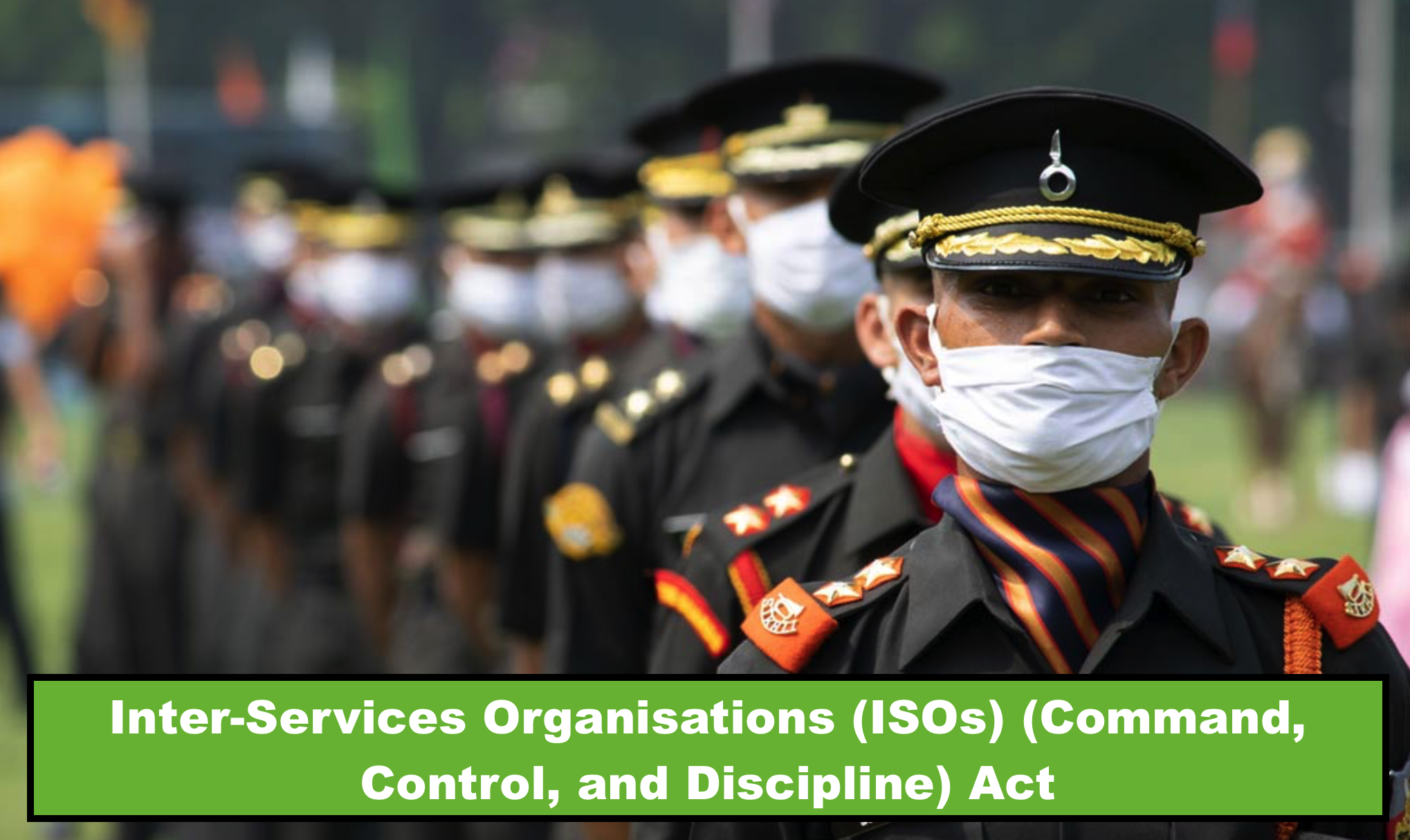
- 11 May 2024
Why is it in the News?
The Inter-Services Organisations (Command, Control and Discipline) Act has been notified in a gazette and has been enforced with effect from May 10, the Defence Ministry said recently.
About Inter-Services Organisations (ISOs) (Command, Control, and Discipline) Act:
- During the Monsoon Session of 2023, both houses of Parliament passed a bill aimed at enhancing the operational efficiency and coordination of Inter-Services Organisations (ISOs).
- These organisations comprise personnel from the Army, Air Force, and Navy, such as joint training institutions like the National Defence Academy, National Defence College (NDC), Defence Services Staff College (DSSC), and the Andaman and Nicobar Command (ANC).
Key Provisions of the ACT:
- Inter-Services Organisation Establishment: Existing Inter-Services Organisations will be considered constituted under the Act.
- The central government may establish an Inter-Services Organisation comprising personnel from at least two of the following services: the Army, Navy, and Air Force.
- Control of Inter-Services Organisations: The Act empowers the Commander-in-Chief or Officer-in-Command of an Inter-Services Organisation to exercise command and control over its personnel.
- They are responsible for maintaining discipline and ensuring the proper discharge of duties by service personnel.
- Supervision of an Inter-Services Organisation will be under the purview of the central government.
- Commander-in-Chief Eligibility: Officers eligible for appointment as Commander-in-Chief or Officer-in-Command include:
- A General Officer of the regular Army (rank above Brigadier),
- A Flag Officer of the Navy (rank of Admiral of the Fleet, Admiral, Vice-Admiral, or Rear-Admiral), or
- An Air Officer of the Air Force (a rank above Group Captain).
- Commanding Officer Appointment: The Act establishes a Commanding Officer responsible for leading a unit, ship, or establishment within the Inter-Services Organisation.
- The Commanding Officer carries out duties assigned by the Commander-in-Chief or Officer-in-Command.
- They have the authority to initiate disciplinary or administrative actions for personnel within the Inter-Services Organisation.
Need for the Act:
- Theaterisation Drive: The enactment aligns with the ongoing push for theaterisation, a vital military reform aimed at optimizing resources for future combat scenarios.
- Existing Framework Challenges: Currently, armed forces personnel are governed by separate laws— the Air Force Act, 1950, the Army Act, 1950, and the Navy Act, 1957—resulting in disjointed disciplinary powers.
- Under the current setup, only officers from the same service possess disciplinary authority over personnel governed by the respective Act, leading to command, control, and discipline challenges.
- Financial Implications: The present framework entails time-consuming processes and financial expenditures for personnel transfers.
- The proposed legislation seeks to remedy these challenges by enhancing discipline enforcement, expediting case resolutions, and potentially saving public funds.
Auroras

- 11 May 2024
Why is it in the News?
The night sky was lit up by northern lights, or aurora borealis, at Hanle village in Ladakh early Saturday morning.
What are Auroras?
- Auroras are essentially natural lights that appear as bright, swirling curtains in the night sky and can be seen in a range of colours, including blue, red, yellow, green, and orange.
- These lights primarily appear near the poles of both the northern and southern hemispheres all year round but sometimes they expand to lower latitudes.
- In the north, the display is called the Aurora Borealis
- In the south, it is known as the Aurora Australis
Why do auroras occur?
- It is due to activity on the surface of the Sun.
- The star continuously releases a stream of charged particles, mainly electrons and protons, and magnetic fields called the solar wind.
- As the solar wind approaches the Earth, it is deflected by the planet’s magnetic field, which acts like a protective shield.
- However, some of the charged particles are trapped in the magnetic field and they travel down the magnetic field lines at the north and south poles into the upper atmosphere of the Earth.
- These particles then interact with different gases present there, resulting in tiny flashes that light up the night sky.
- When solar wind particles collide with oxygen, a green colour light is produced.
- Interaction with nitrogen produces shades of blue and purple.
- Auroras expand to midlatitudes when the solar wind is extremely strong.
- This happens when the activity on the Sun’s surface goes up, leading to solar flares and coronal mass ejections (CMEs), which are essentially extra bursts of energy in the solar wind.
- In such cases, the solar wind is so intense that it can result in a geomagnetic storm, also known as a magnetic storm, a temporary disturbance of the Earth’s magnetic field.
- It is during a magnetic storm that auroras can be seen in the mid-latitudes.
‘Hanooman’ GenAI Platform

- 11 May 2024
Why is it in the News?
Homegrown generative artificial intelligence (GenAI) platform Hanooman went live in 98 global languages, including 12 Indian languages recently.
What is the ‘Hanooman’ Platform?
- Hanooman is India's Gen AI platform, launched in 98 languages including 12 Indian languages such as Hindi, Marathi, Gujarati, Bengali, Kannada, Odia, Punjabi, Assamese, Tamil, Telugu, Malayalam, and Sindhi.
- Abu Dhabi-based AI investment firm 3AI Holding Limited and SML India have built this indigenous platform.
- Named after the revered Hindu deity Hanuman, known for his unparalleled strength, wisdom, and devotion, Hanooman embodies the core principles of intelligence, agility, and resilience.
- The development of Hanooman was driven by a vision to create an AI platform that combines human-like intelligence with advanced machine-learning capabilities to tackle complex problems and drive innovation across diverse domains.
Key Features and Capabilities:
- Natural Language Understanding (NLU): Hanooman boasts advanced NLU capabilities that enable it to understand and interpret human language with remarkable accuracy.
- Whether it's processing text, speech, or multimedia content, Hanooman can analyze and extract meaningful insights to facilitate intelligent decision-making.
- Contextual Awareness: Hanooman is equipped with contextual awareness technology that allows it to understand the context of a given situation and adapt its responses accordingly.
- This enables Hanooman to provide personalized recommendations, anticipate user needs, and deliver tailored experiences across various applications and interfaces.
- Deep Learning and Neural Networks: Leveraging state-of-the-art deep learning algorithms and neural networks, Hanooman is capable of learning from vast amounts of data and continuously improving its performance over time.
- This enables Hanooman to tackle complex problems, such as image recognition, natural language processing, and predictive analytics, with unparalleled accuracy and efficiency.
- Multi-Modal Learning: Hanooman supports multi-modal learning, allowing it to process and integrate information from multiple sources, including text, images, and audio.
- This enables Hanooman to understand and analyze complex data sets more comprehensively, leading to more informed decision-making and actionable insights.
Applications and Uses:
- Healthcare: Hanooman can be used to analyze medical imaging data, diagnose diseases, and develop personalized treatment plans based on individual patient profiles.
- Finance: It can analyze market trends, predict financial risks, and optimize investment strategies to maximize returns and minimize losses.
- Manufacturing: It can optimize production processes, detect anomalies in manufacturing equipment, and improve quality control measures to enhance operational efficiency and reduce downtime.
- Retail: It can analyze customer data, personalize marketing campaigns, and optimize inventory management to drive sales and increase customer satisfaction.
Oleander
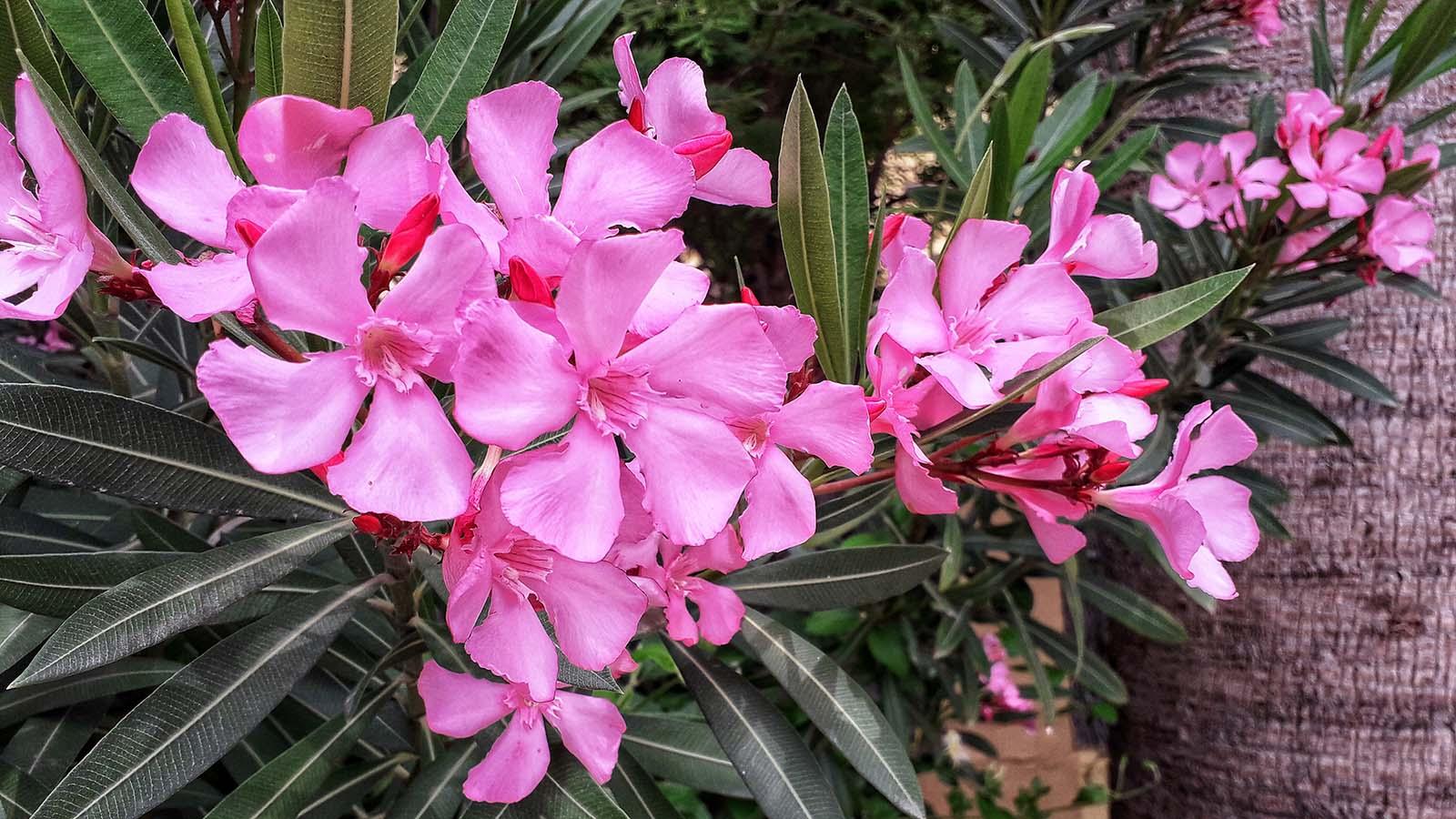
- 10 May 2024
Why is it in the News?
Two Kerala government-controlled temple boards, which together manage 2,500-odd temples in the state, have banned the use of oleander flowers (locally known as arali) in temple offerings after a 24-year-old woman died after accidentally chewing some oleander leaves.
What is Oleander?
- Nerium oleander, commonly known as oleander or rosebay, is a plant cultivated worldwide in tropical, subtropical, and temperate regions.
- Known for its drought tolerance, the shrub is often used for ornamental and landscaping purposes.
- In Kerala, the plant is known by the names of arali and kanaveeram and is grown along highways and beaches as a natural, green fencing.
- There are different varieties of oleander, each with a flower of a different colour.
How is oleander used in traditional medicine?
- The Ayurvedic Pharmacopoeia of India (API), a government document that describes the quality, purity, and strength of drugs used in Ayurveda, mentions oleander.
- According to API, an oil prepared from the root bark can be used to treat skin diseases.
- The plant has been “frequently described in Brihattrayi, Nighantus and other classical Ayurvedic texts.
- Charka [Charak Samhita] has prescribed the leaves of white-flowered variety externally for chronic and obstinate skin diseases of serious nature including leprosy.
How toxic is oleander?
- Even though it is prescribed in some ayurvedic formulations, oleander’s toxicity has also long been recognised across the world.
- The plant has been “exploited therapeutically and as an instrument of suicide since antiquity.
- Moreover, ingestion or inhalation of smoke from burning oleander can also be intoxicating.
- This is due to the properties of cardiac glycosides (a type of chemical) including oleandrin, folinerin, and digitoxigenin, which are present in all parts of the plant.
- Cardiac glycosides are steroidal compounds capable of exerting pharmacological effects on cardiac muscle.
- The primary therapeutic value of these glycosides lies in their ability to exert profound tonic effects on the heart.
- However, the therapeutic window is small and overdose/toxicity is frequently encountered when using these drugs.
- Effects of oleander toxicity include nausea, diarrhoea, vomiting, rashes, confusion, dizziness, irregular heartbeat, slow heartbeat, and, in extreme cases, death.
- Symptoms last for 1 to 3 days and may require a hospital stay.
World Migration Report 2024
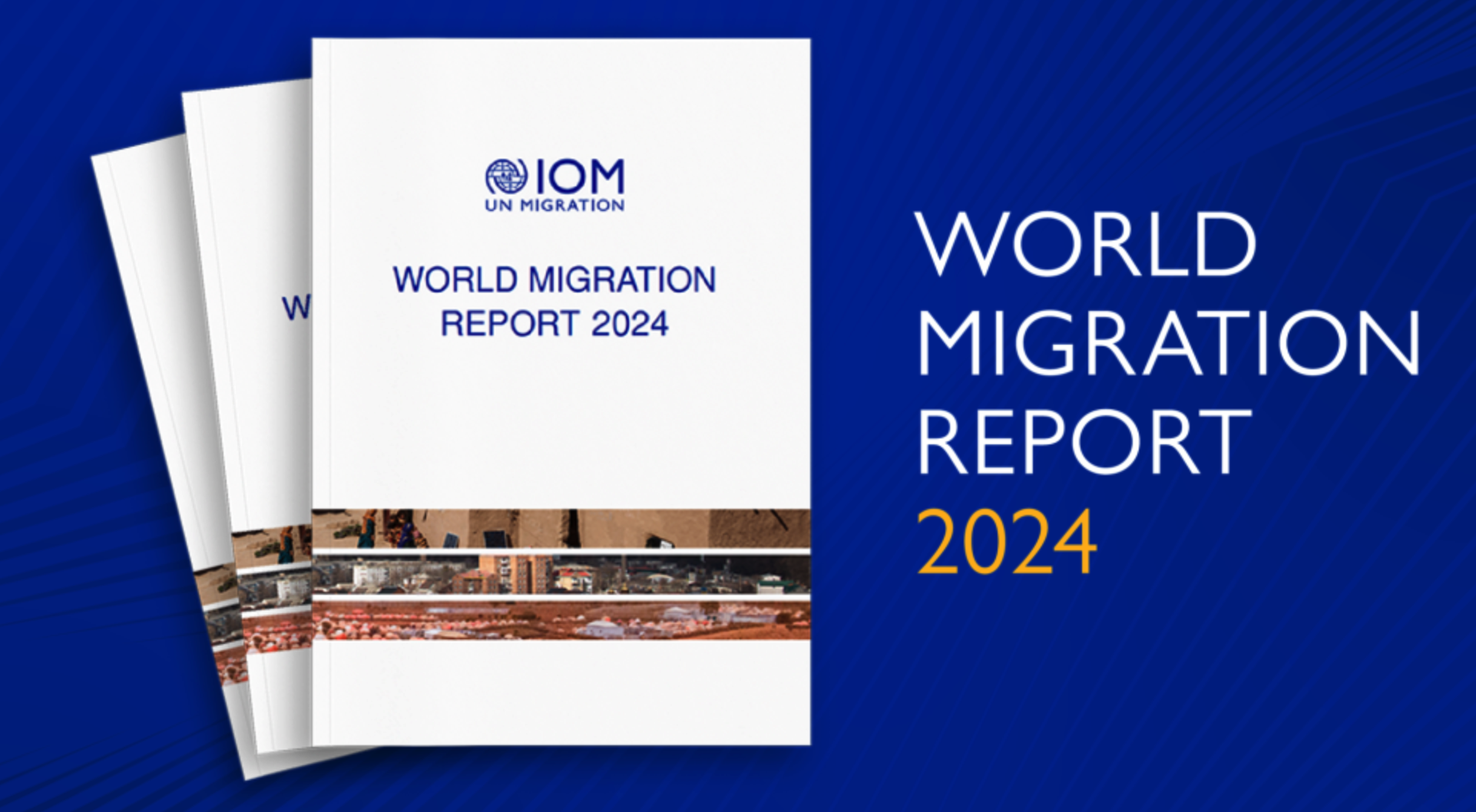
- 10 May 2024
Why is it in the News?
According to the recently released World Migration Report 2024, which is published by the International Organization for Migration (IOM), India has consistently been the top recipient of remittances globally.
Key Highlights of the World Migration Report 2024:
- Resilience Amidst COVID-19: Despite the challenges posed by the COVID-19 pandemic, international migration remains a vital driver of human development and economic progress.
- Notably, there has been a remarkable over 650 per cent surge in international remittances from 2000 to 2022, soaring from USD 128 billion to USD 831 billion.
- This growth defied predictions of a substantial decrease in remittances due to COVID-19.
- Remittances to Low and Middle-income Countries: Out of the total remittances, which amounted to USD 831 billion, a significant portion of USD 647 billion was sent by migrants to low and middle-income countries.
- These remittances play a crucial role in the GDPs of these nations, surpassing foreign direct investment globally.
- Persistent Challenges: While international migration continues to foster human development, the report underscores enduring challenges.
- The global population of international migrants has reached approximately 281 million, while the number of individuals displaced by conflict, violence, disasters, and other factors has surged to a record high of 117 million.
- Urgent action is imperative to address displacement crises effectively.
- Misinformation and Politicization: Despite the fact that most migration is regular, safe, and regionally focused, public discourse has been clouded by misinformation and politicization.
- It is essential to provide a clear and accurate depiction of migration dynamics to counteract this trend.
About the International Organization for Migration (IOM):
- Established in 1951, IOM, the UN Migration Agency, is the leading inter-governmental organization in the field of migration and works closely with governmental, intergovernmental and non-governmental partners.
- IOM works to help ensure the orderly and humane management of migration, promote international cooperation on migration issues, assist in the search for practical solutions to migration problems and provide humanitarian assistance to migrants in need, including refugees and internally displaced people.
- Membership: Currently, IOM counts 175 Member States and 8 states with Observer status.
- India joined as an IOM Member State on June 18, 2008.
- Headquarters: Situated in Geneva, Switzerland, IOM's headquarters serves as a hub for its global operations.
UN Counter-Terrorism Trust Fund
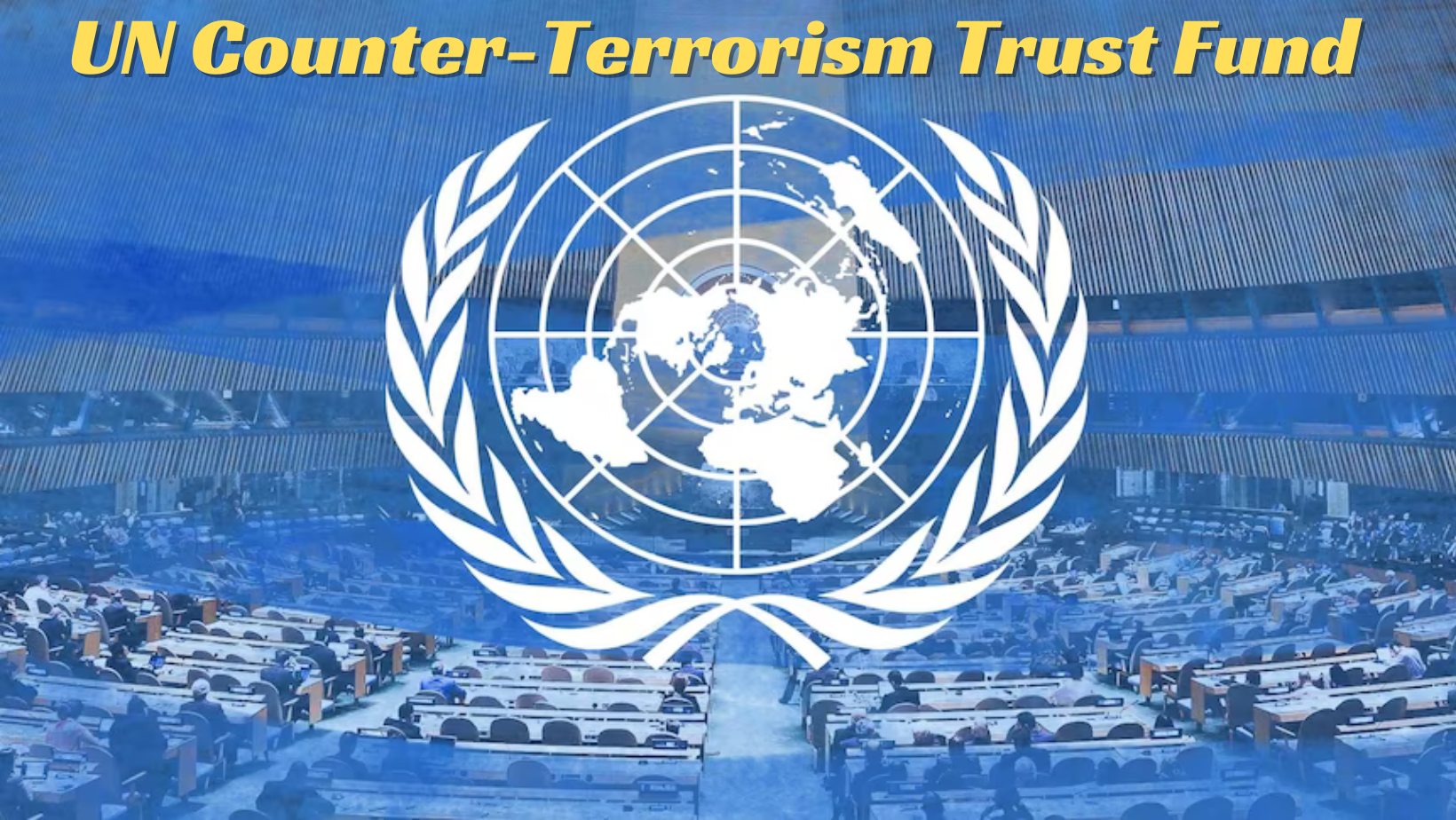
- 10 May 2024
Why is it in the News?
India recently contributed $5,00,000 to the UN Counter-Terrorism Trust Fund, reaffirming its unwavering commitment to the global fight against terrorism.
About the UN Counter-Terrorism Trust Fund:
- The United Nations Counter-Terrorism Trust Fund, founded in 2009 and transferred to the UN Office of Counter-Terrorism (UNOCT) in 2017, plays a crucial role in supporting global counter-terrorism initiatives.
- Contributions: Governments, inter-governmental and non-governmental organizations, private institutions, and individuals can all contribute to the fund.
- Contributions may be unearmarked or earmarked for specific global programmes or initiatives under UNOCT.
- India’s Contribution: India's contribution primarily supports UNOCT's global programmes, specifically focusing on Countering Financing of Terrorism (CFT) and the Countering Terrorist Travel Programme (CTTP).
- These initiatives aim to enhance the capacities of member states in eastern and southern Africa to combat terrorism financing and prevent the movement and travel of terrorists.
Key Facts about the UN Office of Counter-Terrorism (UNOCT):
- Established on June 15, 2017, through a UN General Assembly resolution, UNOCT is mandated to provide leadership and coordination on counter-terrorism efforts across the United Nations system.
- UNOCT's primary functions include enhancing collaboration among entities within the Global Counter-Terrorism Coordination Compact, ensuring a balanced implementation of the four pillars of the UN Global Counter-Terrorism Strategy, and strengthening capacity-building assistance for Member States.
- UNOCT also focuses on improving visibility, advocacy, and resource mobilization for UN counter-terrorism initiatives, while prioritizing the prevention of violent extremism within the broader counter-terrorism framework.
Non-market Economy Status

- 10 May 2024
Why is it in the News?
Vietnam has been pushing the President Joe Biden administration to quickly change its “non-market economy” classification to “market economy”, in a bid to avoid high taxes imposed by the US on the goods imported from the Southeastern country.
Why does Vietnam Want to Get the ‘Market Economy’ Status?
- Vietnam has argued that in recent years it has implemented enough economic reforms that get its name off the non-market economies list.
- The country does meet a number of criteria for the status to be changed.
- For instance, Vietnam allows foreign investment, wages are determined by free negotiations between workers and management, and most of the means of production are not owned by the state.
- The change in status will also help Vietnam get rid of the anti-dumping duties, making its products more competitive in the US market.
- Vietnam’s Center for WTO and International Trade has said that the method of calculating anti-dumping duties is flawed as it causes “the dumping margin to be pushed up very high” and does not actually reflect the situation of Vietnamese companies.
About Non-market Economy Status:
- Non-market economy status refers to a designation applied to countries by international trade authorities, particularly the World Trade Organization (WTO), based on their economic structure and policies.
- In a non-market economy, the allocation of resources, production decisions, and pricing mechanisms are predominantly influenced by the government rather than by market forces.
- This can include state ownership of key industries, government intervention in setting prices, and restrictions on foreign investment and trade.
- For trade purposes, countries classified as non-market economies may face different treatment in anti-dumping investigations and trade disputes.
- This designation can affect how trade regulations and tariffs are applied to goods originating from these countries.
- The US designates a country as a non-market economy based on several factors which are:
- If the country’s currency is convertible
- If wage rates are determined by free bargaining between labour and management
- If joint ventures or other foreign investments are allowed whether the means of production are owned by the state; and
- If the state controls the allocation of resources and price and output decisions.
- Other factors like human rights are also considered.
- The non-market economy label allows the US to impose “anti-dumping” duties on goods imported from designated countries.
Market Economies:
- Market economies operate based on the interactions between consumers and businesses, guided primarily by the law of supply and demand, rather than by central government policies.
- Theoretical Foundation: Developed by classical economists like Adam Smith, David Ricardo, and Jean-Baptiste Say, market economies emphasize the role of free markets in allocating resources efficiently.
- Modern Market Economies: Often referred to as mixed economies, modern market economies may still involve some government interventions, such as price-fixing, licensing, quotas, and industrial subsidies, but the majority of decisions are market-driven.
- Examples include countries like India, the USA, and the UK, where market forces play a significant role in shaping economic activities.
What is Anti-dumping Duty?
- An anti-dumping duty is a protectionist tariff that a domestic government imposes on foreign imports that it believes are priced below fair market value.
- In order to protect their respective economy, many countries impose duties on products they believe are being dumped in their national market; this is done with the rationale that these products have the potential to undercut local businesses and the local economy.
- While the intention of anti-dumping duties is to save domestic jobs, these tariffs can also lead to higher prices for domestic consumers.
- In the long term, anti-dumping duties can reduce the international competition of domestic companies producing similar goods.
- The World Trade Organization (WTO)–an international organization that deals with the rules of trade between nations–also operates a set of international trade rules, including the international regulation of anti-dumping measures.?
Antarctic Treaty Consultative Meeting (ATCM)
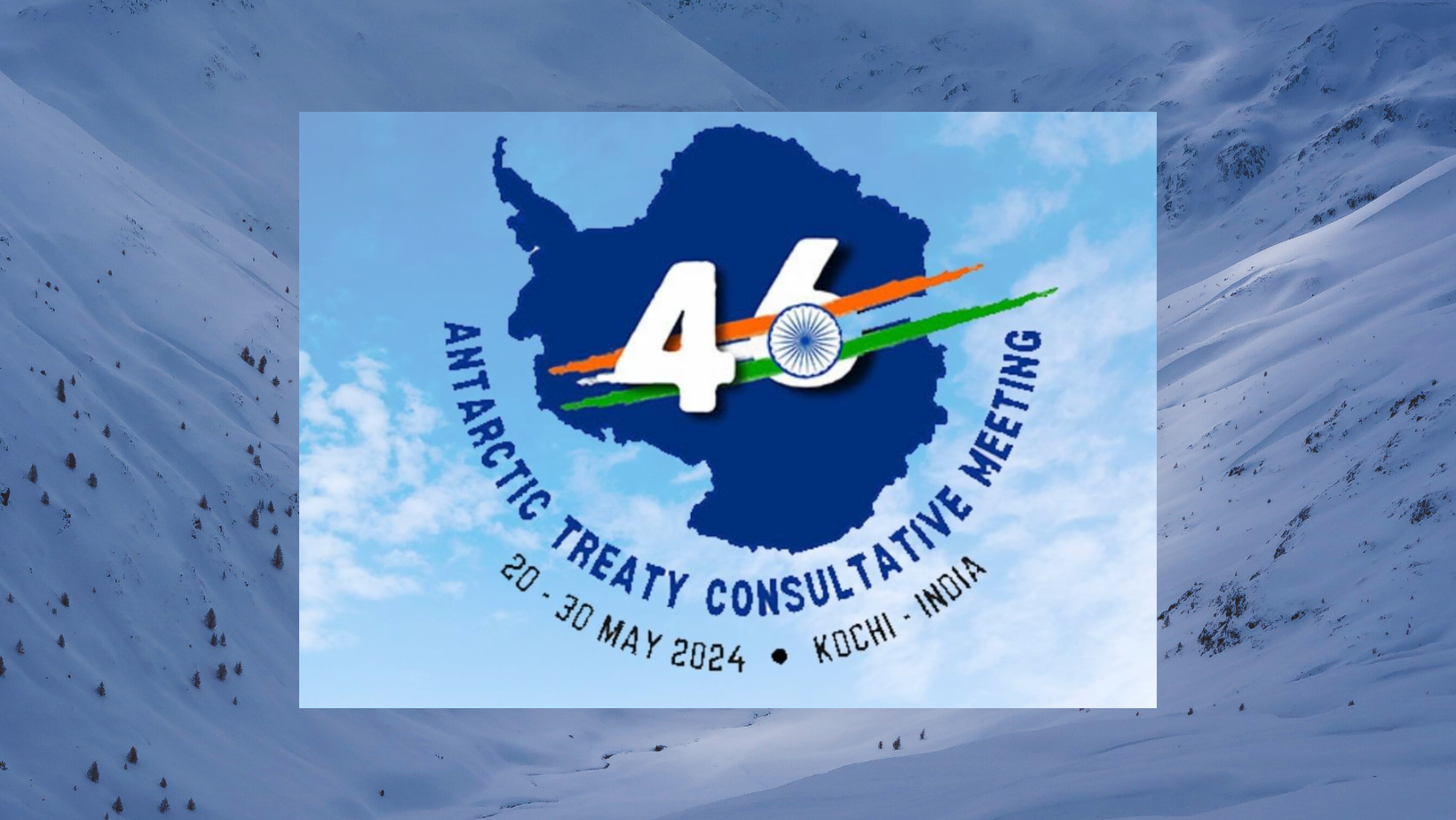
- 09 May 2024
Why is it in the News?
India is working with like-minded countries to promote regulated tourism in Antarctica as a steady increase in the number of tourists threatens to harm the fragile ecology in the White Continent.
About the Antarctic Treaty Consultative Meeting:
- The Antarctic Treaty Consultative Meeting (ATCM) is the annual meeting of the Parties to the 1959 Antarctic Treaty.
- The meeting serves as a platform for the exchange of information, discussion of common interests, and promotion of the principles and purposes of the Antarctic Treaty.
- The first ATCM was held in 1961, and initially occurred every other year, though the frequency has since increased.
- During the ATCM, representatives of the member countries address various issues related to Antarctica, such as environmental protection, scientific research, and tourism regulation.
- Key agenda items include strategic planning for sustainable management of Antarctica and its resources, policy, legal, and institutional operations, and biodiversity prospecting.
- The ATCM is organized by the Antarctic Treaty Secretariat, which is headquartered in Buenos Aires, Argentina, and was established in 2004.
- The Secretariat is responsible for facilitating communication and information exchange among the parties involved in the Antarctic Treaty System.
- In recent years, the ATCM has been hosted by various countries, with India hosting the 46th meeting in 2024.
- The Ministry of Earth Sciences (MoES), Government of India, through the National Centre for Polar and Ocean Research (NCPOR) and the Secretariat of the Antarctic Treaty will jointly organise the 46th Antarctic Treaty Consultative Meeting (ATCM 46) from 20 to 30 May 2024 at the Lulu Bolgatty International Convention Centre (LBICC) in Kochi, India.
What is the Antarctic Treaty?
- The Antarctic Treaty is an international agreement that aims to preserve and protect the Antarctic continent and its surrounding waters for scientific research and peaceful purposes.
- Signed on December 1, 1959, by 12 countries, the treaty came into effect on June 23, 1961.
- The treaty establishes Antarctica as a natural reserve devoted to scientific research, and it designates the area south of 60°S latitude as a region free of military and nuclear activities.
Key aspects of the treaty include:
-
- Freedom of scientific research and exploration, with cooperation among signatory nations
- Exchange of scientific information and personnel between treaty member nations
- Prohibition of military activities, such as the establishment of military bases or weapons testing
- Prohibition of nuclear explosions and disposal of radioactive waste
- Acknowledgement that no new territorial claims can be made on the continent
- Designation of Antarctica as a "Special Conservation Area" to protect its ecosystems and native species
- Currently, 54 countries have ratified the Antarctic Treaty, and 29 of these countries have Consultative Party status.
- Consultative Parties have the right to participate in decision-making processes related to the management and governance of the Antarctic region, while Non-Consultative Parties are encouraged to engage in scientific research and exchange information.
- On 12 September 1983, India became the fifteenth Consultative Member of the Antarctic Treaty.
- It participates in the decision-making process along with the other 28 Consultative Parties to the Antarctic Treaty.
- India’s first Antarctic research station, Dakshin Gangotri, was established in 1983.
- At present, India operates two year-round research stations: Maitri (1989) and Bharati (2012).
- The permanent research stations facilitate Indian Scientific Expeditions to Antarctica, which have been ongoing annually since 1981.
- In 2022, India enacted the Antarctic Act, reaffirming its commitment to the Antarctic Treaty.
Global Electricity Review 2024

- 09 May 2024
Why is it in the News?
In 2023, India overtook Japan to become the world’s third-highest producer of solar power, according to a report by international energy analytics agency Ember recently.
About Global Electricity Review 2024:
- The Global Electricity Review is published by Ember, a leading climate and energy think tank focused on accelerating the global transition to clean energy.
- The Global Electricity Review 2024 offers an in-depth analysis of the global electricity landscape in 2023.
- Drawing from a vast dataset encompassing 80 countries representing 92% of global electricity demand, and historical data from 215 countries, the report provides a robust and comprehensive examination of the current state of the electricity sector.
- The report's objective is to evaluate the progress made in transitioning the world's electricity systems towards cleaner, low-carbon sources, with a focus on limiting global temperature rise to 1.5 degrees Celsius.
Key Findings from the Report:
- Record Solar Energy Generation: Solar energy accounted for a record 5.5% of global electricity in 2023, solidifying its position as the fastest-growing electricity source for the nineteenth consecutive year.
- Renewables Surge: Renewable sources accounted for 30% of global electricity, marking a significant increase from 19% in 2000. Solar and wind power drove this expansion, with low-carbon sources contributing to nearly 40% of global electricity generation in 2023.
- Fossil Fuel Decline Forecast: The report predicts a decline in fossil fuel generation in 2024 and beyond, indicating a possible peak in global fossil fuel production in 2023.
- China's Dominance: China emerged as a significant contributor to renewable energy, accounting for 51% of the global solar generation increase and 60% of new global wind generation in 2023.
India-Specific Insights from the Report:
- India's Rise in Solar Generation: In 2023, India surpassed Japan to become the world's third-largest solar power generator, climbing from its ninth position in 2015.
- While India's installed solar capacity ranks fifth globally, its rapid growth demonstrates significant progress in harnessing solar energy.
- Share of Solar Energy in India's Electricity Mix: India generated 5.8% of its electricity from solar energy in 2023.
- This substantial contribution highlights the increasing role of solar power in meeting the country's energy demands.
- India's Contribution to Global Solar Growth: India experienced the world's fourth-largest surge in solar generation in 2023, adding 18 TWh to its capacity.
- Alongside China, the United States, and Brazil, India accounted for 75% of global solar growth in that year.
- Solar Generation Growth Since 2015: Global solar generation in 2023 was six times higher than in 2015, with India witnessing a remarkable seventeen-fold increase.
- India's Renewable Energy Target: India has committed to tripling its renewable capacity by 2030, aiming for 500 GW of installed renewable energy capacity.
- This ambitious target will require a significant acceleration in annual capacity additions.
AlphaFold 3
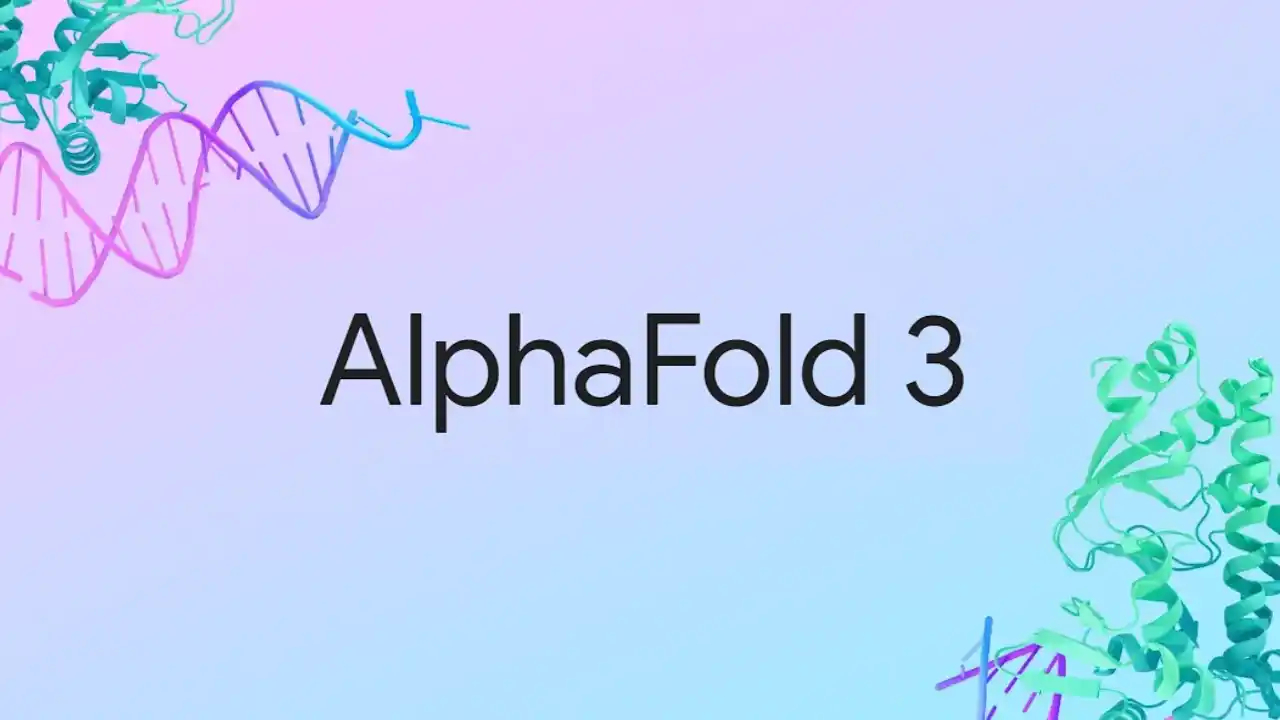
- 09 May 2024
Why is it in the News?
Google Deepmind has unveiled the third major version of its “AlphaFold” artificial intelligence model, designed to help scientists design drugs and target diseases more effectively.
About AlphaFold 3:
- AlphaFold 3 is a major advancement in artificial intelligence created by Google's DeepMind in collaboration with Isomorphic Labs.
- It's essentially a powerful tool that can predict the structures and interactions of various biological molecules such as:
- Predict structures of biomolecules: Unlike previous versions that focused on proteins, AlphaFold 3 can predict the 3D structure of a wide range of molecules, including DNA, RNA, and even small molecules like drugs (ligands).
- This is a significant leap in understanding how these molecules function.
- Model molecular interactions: AlphaFold 3 goes beyond just structure prediction.
- It can also model how these molecules interact with each other, providing valuable insights into cellular processes and disease mechanisms.
The potential applications of AlphaFold 3 are vast. It has the potential to revolutionize fields like:
- Drug discovery: By understanding how drugs interact with their targets, researchers can design more effective medications.
- Genomics research: AlphaFold 3 can help scientists understand the function of genes and how mutations can lead to disease.
- Materials science: By modelling the interactions between molecules, scientists can design new materials with specific properties.
- AlphaFold 3 is a significant breakthrough and is freely available for non-commercial use through AlphaFold Server.
- This makes this powerful tool accessible to researchers around the world, potentially accelerating scientific advancements.
Widal Blood Test
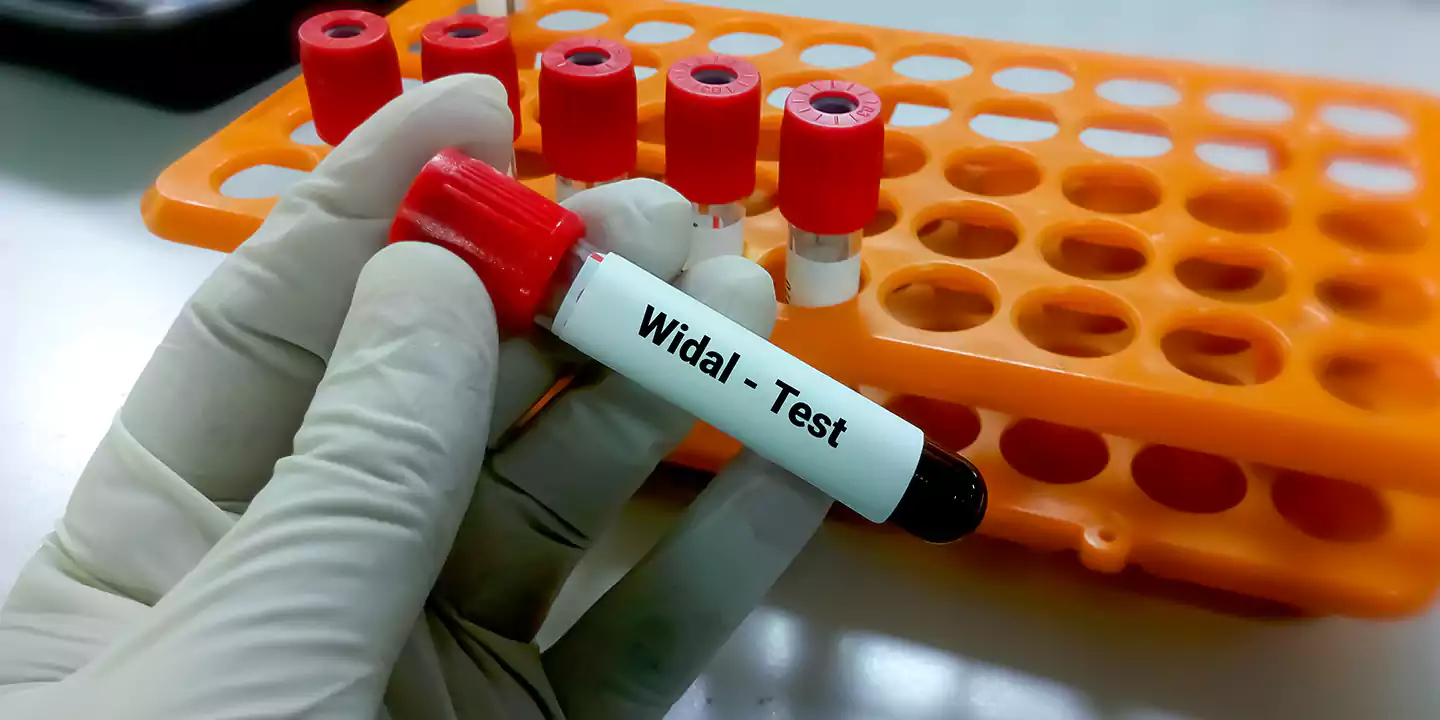
- 09 May 2024
Why is it in the News?
The Widal test's tendency to produce inaccurate results is clouding the understanding of India's typhoid burden, leading to increased costs, and exacerbating antimicrobial resistance risks.
What is the Widal Blood Test?
- A Widal test is a serological diagnostic test for typhoid fever.
- It helps evaluate the level of antibodies produced by the body in response to the Salmonella bacterial infection that causes typhoid fever in patients.
- Widal blood test is also known as a typhoid blood test report, as it is widely used for diagnosing typhoid fever.
- The symptoms of typhoid fever may be similar to those of other diseases, which can make the diagnosis of typhoid difficult without proper testing.
- Typhoid fever is a severe illness caused by a bacterium called Salmonella Typhi.
- This bacterium affects the gastrointestinal system and causes a range of symptoms such as high fever, diarrhoea or constipation, headache, abdominal pain, fatigue, weight loss, and red spots.
- The bacteria usually enter the body through contaminated food or water.
- Typhoid requires prompt treatment to prevent further complications such as severe intestinal perforation or bleeding.
- The Widal blood test is a quick and easy serological test that can help confirm or rule out whether a fever is due to a typhoid infection.
- Typically, typhoid symptoms appear within 6 to 30 days of exposure to the bacterial infection.
- The Widal test is designed to detect antibodies against O (somatic) and H (flagellar) antigens that cause the infection and typhoid fever.
- Infection through these antigens produces specific antibodies in response.
- The Widal blood test analyses the interaction between these two antigens and the antibodies produced in the patient's body through a blood sample.
- Detecting the presence of these antibodies in the Widal blood test indicates a bacterial infection.
- However, it has several limitations and has been phased out in many countries due to its potential for inaccuracy.
- The World Health Organization (WHO) advises against relying heavily on the Widal Test because various factors can influence its results.
- For example, a single positive result does not definitively confirm an active typhoid infection and a negative result does not necessarily rule it out.
- Additionally, obtaining an accurate diagnosis requires testing at least two serum samples taken 7-14 days apart, which can be time-consuming and often impractical.
- In areas with a continuous high burden of typhoid, baseline antibody levels may already be elevated, complicating the interpretation of results without knowing the appropriate cut-off values.
- Furthermore, cross-reactivity with antibodies produced against other infections or vaccinations can lead to false positives.
- Prior antibiotic therapy can also impact antibody levels, resulting in false negatives.
- Despite its accessibility and historical significance, the Widal Test's limitations emphasize the need for more accurate and reliable diagnostic methods for typhoid fever.
African Union (AU)
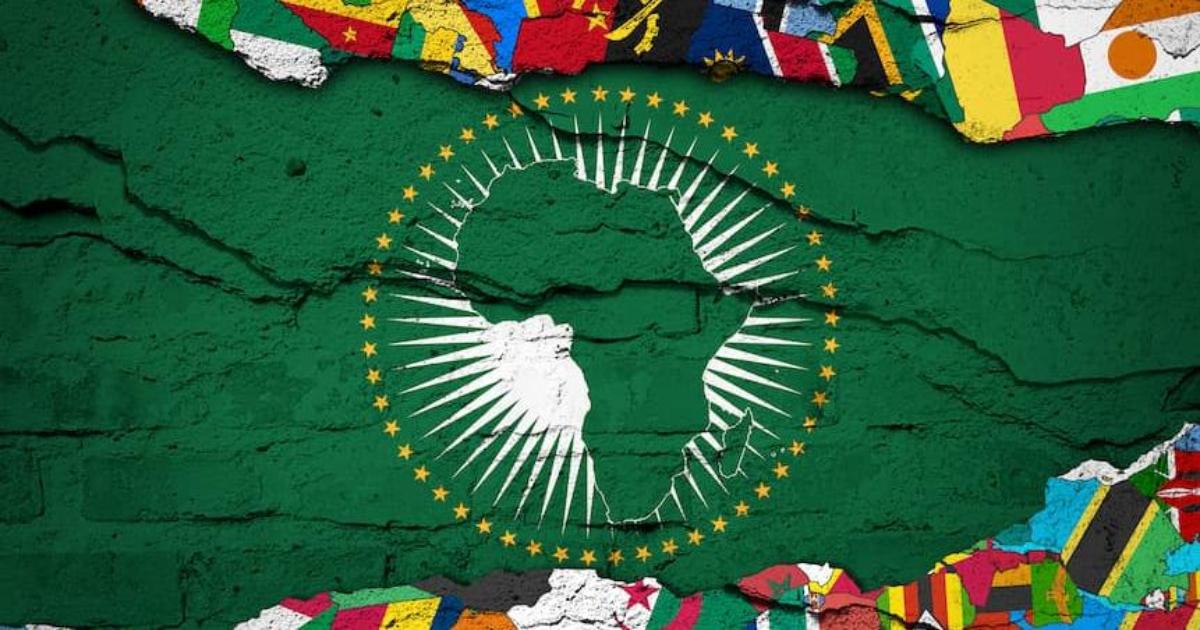
- 09 May 2024
Why is it in the News?
The African Union condemned Wednesday the Israeli military's moves into southern Gaza's Rafah, calling for the international community to stop "this deadly escalation" of the war.
About the African Union (AU):
- The African Union (AU) is a continental organization comprising 55 member states, representing the countries of the African continent.
- Established in 2002, it succeeded the Organization of African Unity (OAU), which was founded in 1963.
- The primary objective of the AU is to promote unity, cooperation, and development among African nations while advancing the continent's global interests.
- Guided by a vision of "An Integrated, Prosperous, and Peaceful Africa, driven by its own citizens and representing a dynamic force in the global arena," the AU plays a critical role in fostering collaboration and progress across the continent.
- To realize its objectives and attain the Pan-African Vision of an integrated, prosperous, and peaceful Africa, the AU developed Agenda 2063, a strategic framework for Africa's long-term socio-economic and integrative transformation.
- This ambitious agenda emphasizes the importance of collaboration and support for African-led initiatives to ensure the aspirations of the African people are achieved.
- The African Union is headquartered in Addis Ababa, Ethiopia, where it functions as a central hub for decision-making and policy development.
The African Union (AU) operates through a structured framework aimed at efficient decision-making and implementation. Its key components include:
- Assembly: Comprising the heads of state and government of member countries, the Assembly serves as the highest decision-making body within the AU.
- Executive Council: Comprised of foreign affairs ministers, the Executive Council focuses on policy matters and offers recommendations to the Assembly.
- AU Commission: Headquartered in Addis Ababa, the AU Commission serves as the administrative arm responsible for executing the decisions of both the Assembly and the Executive Council.
- Peace and Security Council: This council is entrusted with the vital task of preserving peace and security across the continent, addressing conflicts and promoting stability.
- Additionally, the AU structure fosters the active involvement of African citizens and civil society through institutions such as the Pan-African Parliament and the Economic, Social & Cultural Council (ECOSOCC), ensuring broader participation and representation in the union's endeavours.
West Nile Fever
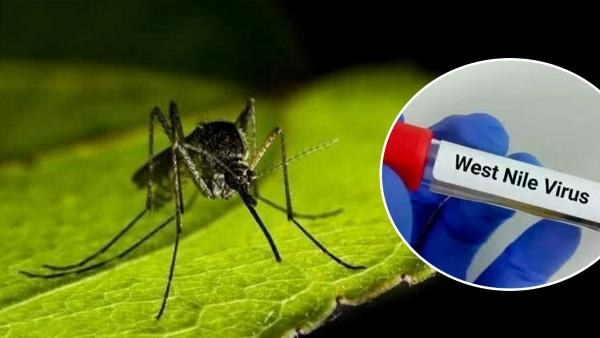
- 08 May 2024
Why is it in the News?
The Kerala health department has issued an alert after cases of West Nile fever were reported in Malappuram, Kozhikode and Thrissur districts.
What is West Nile Fever?
- West Nile Fever is a viral infection transmitted primarily by mosquitoes, caused by the West Nile virus (WNV).
- The virus is commonly found in Africa, Europe, the Middle East, North America, and West Asia.
- Most people infected with the West Nile virus don’t experience any symptoms.
- About 20% of people who become infected with WNV will develop West Nile fever.
- However, for some, particularly the elderly or those with weakened immune systems, symptoms can range from mild flu-like symptoms such as fever, headache, body aches, fatigue etc.
- Transmission occurs when mosquitoes become infected after feeding on infected birds, and then bite humans.
Why is it named West Nile Fever?
- West Nile Virus was first isolated in a woman in the West Nile district of Uganda in 1937.
- According to the World Health Organisation (WHO), It was identified in birds in the Nile Delta region in 1953,
Symptoms:
- West Nile Fever can manifest with a range of symptoms, although the majority of individuals infected with the West Nile virus (WNV) remain asymptomatic.
- For those who do exhibit symptoms, they typically appear within 2 to 14 days after being bitten by an infected mosquito.
- Common symptoms include fever, headache, body aches, and fatigue, which are similar to those of the flu.
- Additionally, individuals may experience nausea, vomiting, diarrhoea, and swollen lymph glands.
- Skin rash and swollen joints are also reported in some cases.
- In more severe instances, West Nile Fever can lead to neurological complications.
- These may include meningitis (inflammation of the membranes surrounding the brain and spinal cord) or encephalitis (inflammation of the brain).
- Signs of neurological involvement may include severe headache, high fever, neck stiffness, disorientation, tremors, seizures, paralysis, and coma.
Treatment:
- While there is no specific treatment for West Nile Fever, supportive care such as pain management, fluids, and rest can help alleviate symptoms and aid recovery.
- Prompt medical attention is crucial, especially for those experiencing neurological symptoms, as these can be life-threatening.
Leber Congenital Amaurosis (LCA)

- 08 May 2024
Why is it in the News?
Scientists utilized a CRISPR-Cas9 tool to restore vision in individuals, including adults and children, afflicted with congenital blindness termed Leber congenital amaurosis (LCA).
What is Leber Congenital Amaurosis?
- Leber Congenital Amaurosis (LCA) is a rare genetic eye disorder where affected infants experience severe vision loss or blindness at birth.
- The condition results from the impaired function of light-gathering cells (rods and cones) in the retina.
Prevalence and Cause:
- LCA affects approximately one in 40,000 people.
- It is caused by a gene mutation that disrupts the proper function of the CEP290 protein, which is critical for vision.
Recent Development:
- Scientists have employed CRISPR-Cas9 gene editing technology to develop a novel therapy called EDIT-101.
- In a clinical trial called "BRILLIANCE," participants received a single dose of EDIT-101.
- The treatment involves cutting out the mutation in the CEP290 gene and replacing it with healthy DNA, restoring the normal function of the CEP290 protein and allowing the retina to detect light.
- This groundbreaking approach offers a promising treatment for individuals affected by LCA.
What is CRISPR-Cas9?
- CRISPR-Cas9 is a unique technology that enables geneticists and medical researchers to edit parts of the genome by removing, adding or altering sections of the DNA sequence.
- It is currently the simplest, most versatile and precise method of genetic manipulation.
How does CRISPR-Cas9 work?
- The CRISPR-Cas9 system operates through two primary molecules:
- Cas9, an enzyme often likened to "molecular scissors," which can precisely cut both strands of DNA at a designated location in the genome.
- Guide RNA (gRNA), a segment of RNA containing a specific pre-designed sequence (about 20 bases long) within a longer RNA scaffold.
- The scaffold binds to DNA, while the pre-designed sequence guides Cas9 to the intended genomic location, ensuring accurate DNA cleavage.
- The guide RNA is tailored to identify and bind to a particular sequence in the DNA, with RNA bases that complement those of the target DNA sequence.
- This specificity ensures that the guide RNA binds solely to the target sequence and avoids other genomic regions.
- Once bound, Cas9 cuts across both DNA strands at the targeted location.
- Subsequently, the cell's repair mechanisms recognize the DNA damage and attempt to rectify it.
- Scientists exploit this DNA repair process to introduce alterations to one or more genes within the genome of a selected cell.
Interactive Voice Response System (IVRS)

- 08 May 2024
Why is it in the News?
Political parties are currently reaching out to voters through Interactive Voice Response System (IVRS) calls on a daily basis.
What is an Interactive Voice Response System?
- Interactive voice response is a technology that allows telephone users to interact with a computer-operated telephone system through the use of voice and DTMF tones input with a keypad.
- IVR or Interactive Voice Response software accepts caller input, either voice or touch-tone, in response to pre-recorded prompts, and provides programmed responses.
- The responses can range from simple call routing to complex actions involving several external systems and data points depending on the software’s sophistication.
- The name, “interactive voice response” is derived from the caller responding to interactive options, offered by a pre-recorded voice.
Functionality:
- IVRS is powered by pre-recorded messaging or text-to-speech technology.
- It features a dual-tone multi-frequency (DTMF) interface.
Types:
- Touch-tone replacement: This system prompts callers to use a touch-tone keypad selection to access information.
- Directed dialogue: Provides specific verbal prompts to callers depending on their inquiry.
- Natural language: Employs speech recognition to better understand user requests.
- Industry Application: IVRS technology has been widely used across multiple industries, including banking, customer service, education, healthcare, and travel.
Benefits:
- Increased customer satisfaction by providing a streamlined experience.
- Improved contact centre operations and KPIs through call volume management.
- Reduced hold times during high call volume periods.
- Cost-effectiveness by reducing the need for customer service representatives.
Indian Ocean Dipole (IOD)
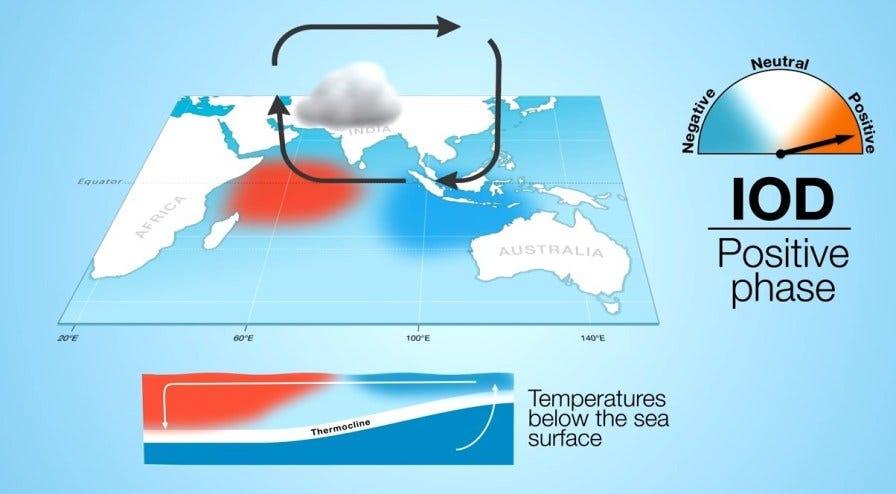
- 08 May 2024
Why is it in the News?
The Positive Indian Ocean Dipole (IOD), also known as the Indian Nino, could potentially resurface for the second consecutive year during the latter part of 2024.
What is the Indian Ocean Dipole (IOD)?
- The Indian Ocean Dipole (IOD) is defined by the difference in the sea surface temperature between the two equatorial areas of the Indian Ocean – a western pole near the Arabian Sea (in western Indian Ocean) and an eastern pole closer to the Bay of Bengal (in eastern Indian Ocean).
- The IOD affects the climate of Southeast Asia, Australia and other countries that surround the Indian Ocean Basin.
- The Indian Monsoon is invariably influenced by the IOD.
- IOD is simply the periodic oscillation of sea surface temperatures, from ‘positive’ to ‘neutral’ and then ‘negative’ phases.
- If the sea surface temperature of the western end rises above normal (0.4°C) and becomes warmer than the eastern end, it leads to a positive IOD.
- This condition is favourable for the Indian Monsoon as it causes a kind of barrier in the eastern Indian Ocean and all the southwesterly winds blow towards the Indian sub-continent.
- Accordingly, the waters in the eastern Indian Ocean cool down, which tends to cause droughts in adjacent land areas of Indonesia and Australia.
- Conversely, during a negative IOD period, the waters of the tropical eastern Indian Ocean are warmer than water in the tropical western Indian Ocean.
- This results in increased rainfall over parts of southern Australia.
Effects on India:
- A positive IOD can boost India's southwest monsoon performance depending on its development timing.
- Example: In 2019, a strong IOD event improved a 30% rainfall deficit during the late monsoon season.
- Benefits for agriculture through recharging water sources and reservoirs.
- The development of IOD likely benefits India's agricultural sector, particularly in areas with precarious water storage levels.
Difference between El Nino and IOD:
- The Indian Ocean Dipole (IOD) and the El Nino are independent climatic phenomena but often co-occur.
- Both IOD and El Nino result in changes in global wind patterns. To know about the change of wind patterns, click here.
- However, the cycle of IOD is shorter, while El Nino condition could last for even two years.
- IOD commences in the month of May and ends with the withdrawal of the Southwest Monsoon in the Indian sub-continent.
LockBit Ransomware

- 08 May 2024
Why is it in the News?
The U.S. Department of Justice has indicted Russian national Dimitry Yuryevich Khoroshev, 31, and announced a $10 million reward for any information leading to his apprehension.
What is LockBit Ransomware?
- LockBit is a type of ransomware involving financial payment in return for decryption.
- It mainly targets businesses and government agencies rather than consumers.
- Its potential targets are the institutions that would be hampered by the inconvenience and have sufficient means to pay a large payment.
- It is developed and operated by a cybercriminal group known as LockBit, which offers ransomware-as-a-service (RaaS) to other malicious actors.
- Formerly known as ABCD ransomware, has evolved into a distinct danger within the spectrum of extortion tools.
- It carries out its attacks mainly via email attachments.
- The cyber assaults through LockBit ransomware can be traced back to September 2019, when it got its first nickname, “abcd virus.”
- The nickname was derived from the filename used when encrypting a victim’s data.
- They are considered one of the most prolific and aggressive organizations in the industry, and their actions are raising anxiety among security professionals worldwide.
How LockBit Ransomware Operates?
- Exploitation: LockBit ransomware breaches systems through social engineering tactics like phishing or brute force attacks on intranet servers.
- Initial breach probes may take only a few days.
- Infiltration: Once inside a network, LockBit uses post-exploitation techniques to escalate privileges and move laterally to assess targets.
- It disables security programs and infrastructure for recovery, making independent recovery difficult.
- Deployment: LockBit spreads across the network, encrypting system files and leaving ransom notes in each folder.
- Payment of the ransom is often seen as the only viable option for victims to regain access to their systems.
How Does LockBit Ransomware Spread?
- LockBit typically spreads via phishing emails with malicious attachments or through drive-by downloading from infected websites.
- It utilizes common Windows tools like Windows PowerShell or Server Message Block, making it challenging for endpoint security systems to detect.
- Additionally, it disguises its encrypting executable file as a common PNG picture file, further evading system defenses.
Takes ransom in Bitcoins:
- LockBit hackers use so-called ransomware to infiltrate systems and hold them hostage.
- They demand payment to unlock the computers they’ve compromised and often threaten to leak stolen data to pressure victims to pay.
- The group typically demands ransom payments in Bitcoin.
Carbon Farming
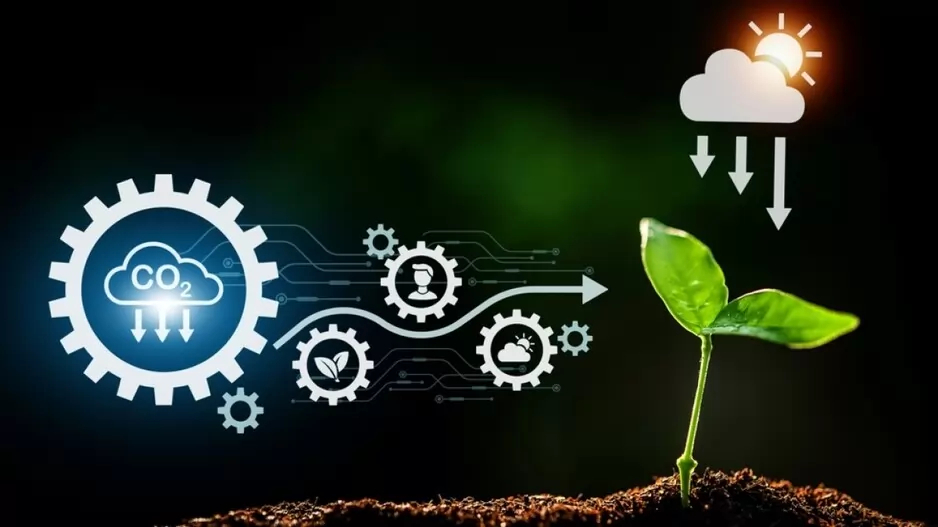
- 07 May 2024
Why is it in the News?
Carbon farming offers a versatile solution applicable across diverse agro-climatic regions, simultaneously addressing issues such as soil degradation, water scarcity, and climate variability challenges.
What is Carbon Farming?
- Carbon farming refers to a set of agricultural practices designed to sequester carbon dioxide from the atmosphere and store it in the soil.
- The primary goal is to mitigate climate change by enhancing carbon capture and reducing greenhouse gas emissions.
- Through strategic land management, farmers can play a crucial role in offsetting carbon emissions and promoting environmental sustainability.
Principles of Carbon Farming:
- Carbon Sequestration: The core principle involves capturing carbon dioxide through photosynthesis and storing it in the soil.
- This is achieved by promoting the growth of plants and trees that absorb carbon from the atmosphere.
- Reduced Emissions: Carbon farming emphasizes practices that minimize greenhouse gas emissions.
- This includes optimizing fertilizer use, adopting no-till farming, and reducing reliance on synthetic inputs.
- Biodiversity Conservation: Integrating diverse crops and promoting agroforestry practices contribute to biodiversity conservation.
- This enhances ecosystem resilience and supports sustainable agricultural systems.
- Soil Health: Improving soil health is fundamental to carbon farming.
- Practices like cover cropping and rotational grazing not only sequester carbon but also enhance soil structure, water retention, and nutrient cycling.
Benefits of Carbon Farming:
- Climate Change Mitigation: The primary benefit is the significant contribution to mitigating climate change.
- Carbon farming helps offset carbon emissions, acting as a natural solution to reduce the concentration of greenhouse gases in the atmosphere.
- Improved Soil Fertility: The focus on soil health leads to increased fertility and productivity.
- Healthy soils contribute to better crop yields, reduced erosion, and enhanced resilience to climate-related challenges.
- Biodiversity Enhancement: Carbon farming practices support biodiversity by creating habitats for diverse plant and animal species.
- This contributes to ecological balance and resilience in the face of environmental changes.
- Economic Opportunities: Farmers engaged in carbon farming may access new revenue streams through carbon offset programs.
- These initiatives incentivize sustainable practices and provide financial benefits to farmers.
Challenges in Carbon Farming:
- Transition Period: Implementing carbon farming practices often requires a transition period, during which farmers may face initial costs and adjustments to new techniques. Financial support and education are crucial during this phase.
- Market Access: Connecting farmers to carbon offset markets can be challenging. Developing transparent and accessible markets for carbon credits is essential for the success of carbon farming initiatives.
- Education and Awareness: Many farmers may not be familiar with carbon farming practices.
- Education and awareness programs are necessary to disseminate information, build capacity, and encourage widespread adoption.
Conclusion
Carbon farming is a dynamic and evolving approach to agriculture that holds immense promise in the fight against climate change. By understanding its principles, benefits, and challenges, farmers and stakeholders can actively contribute to a more sustainable and resilient future. The key terms associated with carbon farming provide a foundation for navigating this innovative landscape and embracing practices that benefit both the environment and agriculture.
Wildlife Corridors
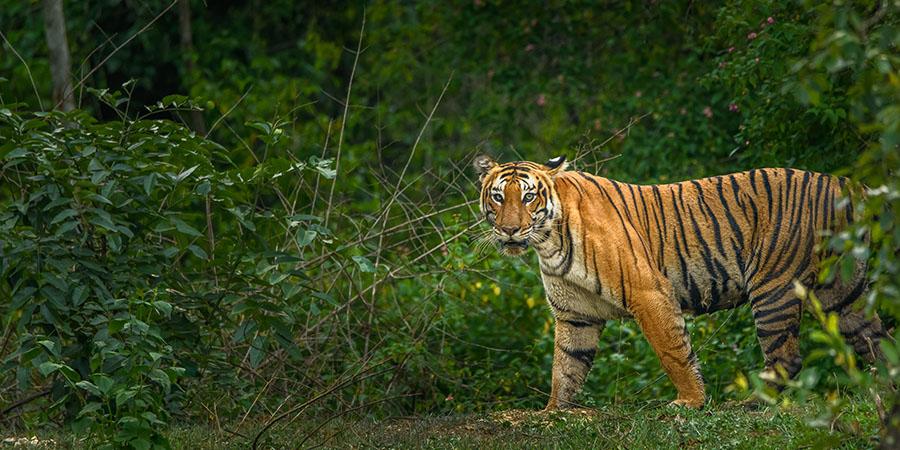
- 07 May 2024
Why is it in the News?
To revive the population of tigers in Sahyadri Tiger Reserve (STR) — the lone tiger reserve in the Maharashtra western region — the state’s forest department will soon translocate tigers from Tadoba-Andhari Tiger Reserve (TATR) in Chandrapur district.
What are Wildlife Corridors?
- Corridors are essentially habitats and pathways that connect wildlife populations, which are fragmented by human settlements and infrastructure works.
- They are crucial for the long-term survival of the tiger population as they help guard against localised extinctions and ensure the exchange of gene flow, which helps in population diversity.
- Tigers have large home ranges and often travel long distances in search of mates and food.
- In doing so, they make use of these wildlife corridors and cross several human-dominated landscapes.
- The role played by corridors in conservation is a well-established one and has been incorporated into policy decisions as well.
- Mitigation measures such as underpasses, and wildlife crossings are now routinely ordered to safeguard tigers and other wildlife in projects where linear infrastructure projects fragment habitats.
- Litigation, advocacy, and policymaking have all contributed to this.
- The construction of an overpass on the National Highway- 7 to protect the migratory route of tigers underneath between the Kanha and Pench Tiger Reserves is one instance of embedding mitigation measures to protect corridors.
- Tigers routinely use the space beneath the elevated stretch of the highway to cross the forests.
- In 2014-15, the National Tiger Conservation Authority and Wildlife Institute of India (WII) mapped 32 major tiger corridors in the country across four broad tiger landscapes – Shivalik Hills and Gangetic plains, Central India and Eastern Ghats, Western Ghats, and the North East Hills.
Is Translocation the Best Approach for Tiger Recovery?
- Tiger translocation projects have been undertaken in India since 2008.
- Sariska Tiger Reserve, in 2008, and Panna Tiger Reserve, in 2009, have witnessed successful tiger reintroduction and translocation projects.
- There have also been failures and shelving of reintroduction plans, like in the case of Satkosia Tiger Reserve in Odisha, which was the country’s first inter-state translocation project.
- However, before choosing translocation, other available options such as habitat improvement, prey augmentation, strengthening of tiger corridors, and vigilance improvement should be assessed.
- Even after translocations, one must ensure that corridors are strengthened and they are free of major disturbances.
- This will ensure the dispersal of tigers to other source population areas.
Sikhs for Justice (SFJ)
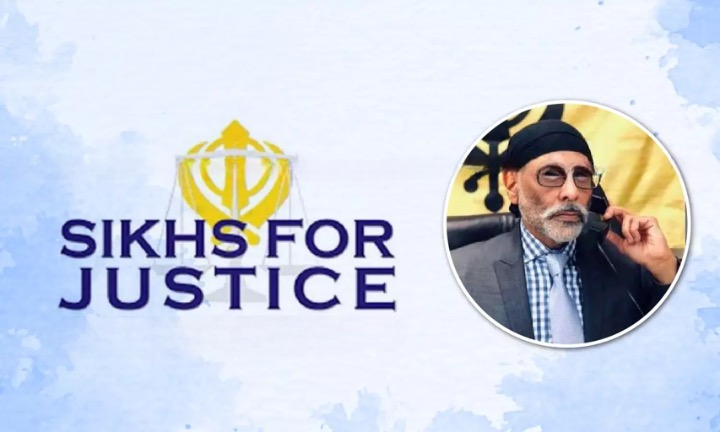
- 07 May 2024
Why is it in the News?
Delhi LG V K Saxena recently recommended a (NIA) probe against jailed Delhi CM Arvind Kejriwal for allegedly receiving political funding from Sikhs for Justice (SFJ), a New York-based pro-Khalistan organisation that is banned in India.
What is Sikhs for Justice (SfJ)?
- Sikhs for Justice (SFJ) formed in 2007, is a US-based group seeking a separate homeland for Sikhs, a “Khalistan” in Punjab.
- Its founder Gurpatwant Singh Pannun, a law graduate from Panjab University and currently an attorney at law in the US, is the face of SFJ and its legal adviser.
- Panun had launched the secessionist Sikh Referendum 2020 campaign, an initiative that eventually became defunct.
- He was among the nine individuals designated as “terrorists” by the Union Ministry of Home Affairs.
- ‘Referendum 2020’, claimed it wanted to “liberate Punjab from Indian occupation”.
- In Pannun’s words, “SFJ in its London Declaration (in August 2018) had announced to hold the first-ever non-binding referendum among the global Sikh community on the question of secession from India and re-establishing Punjab as an independent country.”
Banned in India:
- India refers to Gurpatwant Singh Pannun as a terrorist, and has banned SFJ under the Unlawful Activities (Prevention) Act, 1967.
- The Home Ministry’s 2019 notification issuing the ban says: “In the garb of the so-called referendum for Sikhs, SFJ is actually espousing secessionism and militant ideology in Punjab, while operating from safe havens on foreign soils and actively supported by inimical forces in other countries.”
- Currently, almost a dozen cases are registered against Pannun and SFJ in India.
FLiRT

- 07 May 2024
Why is it in the News?
There’s a new group of COVID-19 variants within the Omicron JN.1 lineage “which have demonstrated increased transmissibility and immune resistance” recently detected in the United States.
What is the New Covid-19 Variant FLiRT?
- FLiRT variants are sub-lineages of the Omicron COVID-19 variant.
- Detected in the United States, this variant group has been named Severe Acute Respiratory Syndrome Coronavirus 2 (SARS-CoV-2) FLiRT variant KP.2 and is a spinoff of JN.1.11.1.
- According to the US Centers for Disease Control and Prevention (CDC), FLiRT has led to increased hospitalisation rates, although it has not significantly raised mortality rates.
- Its primary impact is on the upper respiratory tract.
- The rapid emergence and diversification of the JN.1 variant and its descendant, KP.2, which shows significant alterations in spike (S) protein structure and increased resistance to existing vaccines, underscore the necessity for further research to understand the implications for public health and vaccine development.
Where does the name come from?
- The letters of FLiRT variation are derived from the technical names of the mutations:
- F and L are included in one, and R and T which is included in another.
What are the emerging symptoms?
- Symptoms associated with FLiRT are similar to those of other Omicron subvariants, including sore throat, cough, fatigue, nasal congestion, runny nose, headache, muscle aches, fever, and possible loss of taste and smell
Transmissibility:
- This variant is highly transmissible and can impact immunity and overall health.
- This variant spreads via respiratory droplets of the person to others or touching infected surfaces such as faucets, furniture, elevator buttons, and kitchen countertops, or coming in close contact with the person who is sick with this variant
Is there a concern for India?
- Currently, there are no reported cases of FLiRT variants in India, and our immunity is acquired.
- Thus far, no new vaccine is recommended.
Fusobacterium nucleatum
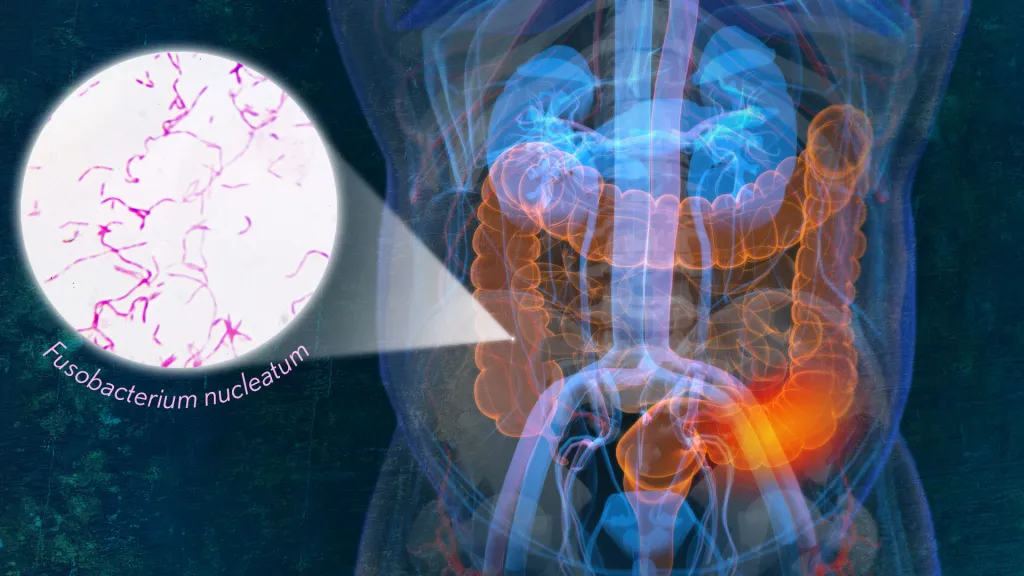
- 07 May 2024
Why is it in the News?
In a recent study, researchers have discovered a unique subtype of Fusobacterium nucleatum that is more prevalent in colorectal cancer (CRC) tumours.
What is Fusobacterium nucleatum?
- Fusobacterium nucleatum is a species of bacteria commonly found in the human mouth and gastrointestinal tract.
- It is a Gram-negative anaerobic bacterium, meaning it does not require oxygen to survive.
- While it is a normal component of the oral microbiota, Fusobacterium nucleatum can also act as an opportunistic pathogen, potentially causing infections in various parts of the body.
- In recent research, specific subtypes of Fusobacterium nucleatum have been associated with colorectal cancer tumours, highlighting its potential role in certain diseases.
- It plays a role in periodontal disease and is often associated with various human diseases and infections, including preterm births.
- F. nucleatum can aggregate with other bacteria species in the oral cavity and is considered a key component of periodontal plaque due to its abundance.
- Detection of F. nucleatum typically involves surgical tissue retrieval, faecal tests, or blood tests in patients showing symptoms, and early detection is crucial for preventing further disease progression.
Highlights of the Recent Research:
- Researchers examined genomes of F. nucleatum types from colorectal tumour samples and individuals without cancer. Among its subspecies, only one, known as Fusobacterium nucleatum animalis (or Fna), was consistently found in tumour samples.
- Further genetic analysis divided Fna into two distinct groups, with only one group, Fna C2, being prevalent in colorectal tumours.
- Fna C2 showed higher acid resistance, potentially allowing it to travel from the mouth to the intestines via the stomach.
- Additionally, Fna C2 demonstrated the ability to hide within tumour cells, evade the immune system, and utilize nutrients found in the gastrointestinal tract.
Boeing Starliner

- 06 May 2024
Why is it in the News?
Boeing’s Starliner spacecraft, carrying two NASA astronauts, will be launched by an Atlas V rocket from the Kennedy Space Center in Cape Canaveral, Florida, to the International Space Station (ISS).
What is Boeing’s Starliner?
- Starliner, a reusable spacecraft, has a pusher abort system.
- This allows the crew to safely escape throughout the launch and the ascent phases of the mission.
- In addition to being software-driven, the Starliner has wireless internet that will help with “crew communication, entertainment and docking with the International Space Station”
- The spacecraft can fly and course-correct on its own.
- It operates like advanced self-driving cars, with features similar to sophisticated cruise control and hands-free driving, allowing astronauts to simply enjoy the ride without intervention.
- It also allows astronauts to choose their level of control.
- Consisting of a crew capsule and a service module, the Starliner aims to revolutionize space travel with its advanced features and capabilities.
Crew Capsule:
- The crew capsule is the heart of the spacecraft, providing housing for astronauts during their journey.
- Designed to withstand the rigours of reentry, the capsule ensures a safe return to Earth for its occupants.
Service Module:
- The service module is equipped with essential systems for astronaut survival, such as air and temperature control, water supply, and sanitation facilities.
- Additionally, it contains the necessary engines and fuel required for manoeuvring the spacecraft in space.
- This module is not reusable and is designed for single use.
Starliner Specifications:
- With a width of over 4 meters, the Starliner can accommodate up to seven astronauts at once.
- The spacecraft boasts a unique weldless structure, making it both durable and reusable, with a potential for up to 10 missions and a six-month turnaround time between launches.
- Furthermore, the Starliner incorporates modern technologies like wireless internet and tablet interfaces for enhanced crew interaction.
Launch Vehicle:
- The Starliner is compatible with the Atlas V rocket, operated by United Launch Alliance (ULA), a joint venture between Boeing and Lockheed Martin.
- This collaboration ensures the seamless integration of the spacecraft and launch vehicle, optimizing mission success.
Why is the mission significant?
- In 2014, NASA selected Boeing and SpaceX to develop spacecraft for transporting astronauts to the International Space Station (ISS).
- While SpaceX has already conducted multiple successful missions with its Dragon crew capsule, the Starliner's success would mark the first time the United States has two domestically produced spacecraft capable of carrying astronauts to space.
- Once operational, Boeing and SpaceX will alternate missions to the ISS, with each crew's expedition lasting up to six months.
- This partnership will continue until the ISS is decommissioned in the next decade.
Air Independent Propulsion (AIP) Technology
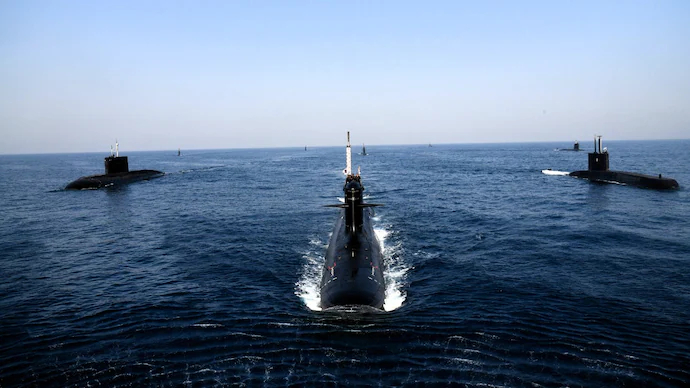
- 06 May 2024
Why is it in the News?
The Indian Navy has initiated trials to modernize its conventional submarine fleet by issuing a Rs 60,000 crore tender for the acquisition of highly advanced submarines equipped with Air Independent Propulsion (AIP) technology.
What is an Air Independent Propulsion (AIP)?
- Air Independent Propulsion (AIP) is a propulsion system used in submarines that allows them to operate underwater for extended periods without the need to surface or snorkel for air.
- Unlike traditional diesel-electric submarines, which rely on diesel engines for surface propulsion and battery-powered electric motors for submerged propulsion, AIP-equipped submarines use a supplementary propulsion system that generates power independently of atmospheric oxygen.
- AIP systems typically employ technologies such as fuel cells, closed-cycle diesel engines, Stirling engines, or other innovative methods to generate electricity or mechanical power for propulsion while submerged.
- Closed Cycle Diesel Engines: These engines use stored liquid oxygen and an inert gas, such as argon, to run the diesel engine while submerged.
- Closed Cycle Steam Turbines: These systems generate steam using stored liquid oxygen and a fuel source, such as diesel or bioethanol, to power a turbine and produce electricity.
- Stirling Cycle Engines: This technology utilizes a closed-cycle heat engine to generate power using a temperature difference between a hot and cold source.
- Fuel Cells: These devices convert chemical energy from a fuel, such as hydrogen, and an oxidizing agent, like stored liquid oxygen, into electrical energy through an electrochemical reaction.
- These systems produce minimal noise and exhaust, allowing submarines to operate quietly and stealthily underwater, making them less vulnerable to detection by sonar and other detection systems.
- The implementation of AIP technology significantly enhances the stealth and endurance capabilities of submarines, enabling them to conduct longer-duration covert missions and remain submerged for extended periods, thereby enhancing their overall operational effectiveness.
- The Defence Research and Development Organisation (DRDO) is pioneering fuel cell-based AIP systems, unique for their hydrogen generation capabilities.
- Developed by the Naval Materials Research Laboratory (NMRL) of DRDO, these systems offer flexibility in operation modes to meet diverse user requirements.
China’s Chang’e-6 Mission

- 06 May 2024
Why is it in the News?
Recently, China launched its second mission to the far side of the Moon. If successful, it will be the world’s first mission to bring back samples from the part of the Moon that the Earth never gets to see.
What is Chang’e-6 Mission?
- China's Chang'e-6 spacecraft launched recently, on a mission to collect samples from the far side of the Moon.
- The mission aims to grab samples containing material ejected from the lunar mantle and thus provide insight into the history of the Moon, Earth, and Solar System.
- It is a 53-day-long mission. After reaching the Moon’s orbit, the mission’s orbiter will circle the natural satellite while its lander will descend into the 2,500-kilometre-wide South Pole-Aitken basin on the lunar surface.
- The impact that created the basin, among the largest in the history of the solar system, is thought to have dug up material from the lunar mantle.
- If that material can be retrieved, scientists can learn more about the history of the Moon’s insides.
- After collecting samples through scooping and drilling, the lander will launch an ascent vehicle, which will transfer the samples to the orbiter’s service module.
- This module will then return to the Earth.
- China is the only country to achieve a soft landing on the far side of the Moon.
- In 2019, its Chang’e-4 mission landed on the region and explored the Moon’s Von Karman crater with the help of a rover.
Why is the Far Side of the Moon Important?
- The Moon’s far side is often referred to as the dark side because it cannot be seen from the Earth, not because it does not catch the Sun’s rays.
- The Moon is tidally locked with the Earth and therefore, we see only one side of the Moon, also known as the near side.
- The far side has been under the spotlight in recent years as it is very different from the near side.
- It has a thicker crust, more craters and fewer maria, or plains where lava once flowed.
- Examining the samples from the far side can help scientists solve mysteries about the origin and evolution of the Moon — till now, scientists have only been able to analyse samples from the near side.
- The far-side samples can also give answers to the longstanding question: why is it different from the near side?
- Going to the far side, getting samples and doing different kinds of geophysical measurements is really important to figuring out this really long, long-standing mystery.
Anthropocene Epoch
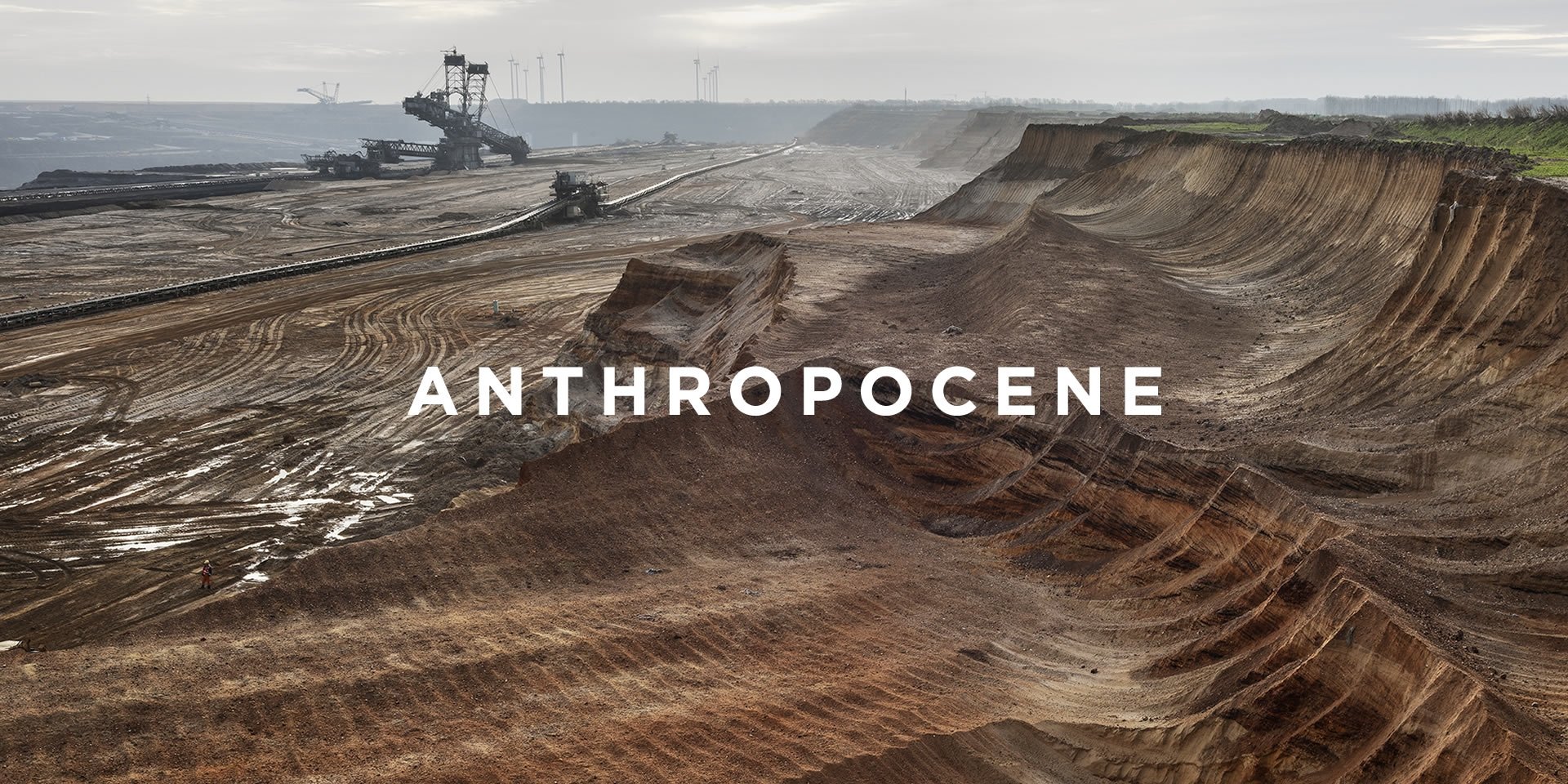
- 06 May 2024
Why is it in the News?
For digital democracies, it is imperative to recognise the potential for self-inflicted social impoverishment by overlooking these long-term challenges of the Anthropocene.
What is an Epoch?
- Epochs form part of the Earth’s official timeline.
- All 4.6 billion years are split into Eons, Eras, Periods, Epochs and Ages - as designated by the International Commission on Stratigraphy.
- The Earth’s current epoch, the Holocene, started at the end of the last ice age, around 12,000 years ago.
- In comparison, the current Eon (in British English Aeon) is the Phanerozoic, which started some 540 million years ago.
What is the Anthropocene Epoch?
- The Anthropocene Epoch is an unofficial unit of geologic time, used to describe the most recent period in Earth’s history when human activity started to have a significant impact on the planet’s climate and ecosystems.
- The term, coined by biologist Eugene Stormer and chemist Paul Crutzen in 2000, combines the Greek words "anthropo" (man) and "cene" (new) to signify the dawn of a new human-centric era.
- Various phenomena characterize this proposed epoch, including global warming, sea-level rise, ocean acidification, mass-scale soil erosion, deadly heat waves, and the deterioration of the biosphere.
- These environmental changes highlight the unprecedented influence of human actions on the Earth's systems.
What is the Geological Time Scale?
- The geological time scale is based on the geological rock record, which includes erosion, mountain building and other geological events.
- Over hundreds to thousands of millions of years, continents, oceans and mountain ranges have moved vast distances both vertically and horizontally.
- For example, areas that were once deep oceans hundreds of millions of years ago are now mountainous desert regions.
- To understand the context of the Anthropocene Epoch, it is essential to explore the geological time scale.
- From longest to shortest, these divisions are called eons, eras, periods, epochs, and ages.
- The study of the correlation between strata and fossils is known as stratigraphy.
Current Epoch and Debate:
- Officially, the current epoch is the Holocene, which started 11,700 years ago after the last major ice age.
- However, there is ongoing debate within the scientific community regarding the distinction between the Holocene and the Anthropocene.
- The International Union of Geological Sciences (IUGS) has yet to formally adopt the term Anthropocene as an official epoch.
- The critical question the IUGS needs to address is whether human influence has significantly altered the Earth's systems to the extent that it is reflected in the rock strata.
- As the debate continues, the Anthropocene Epoch serves as a reminder of the profound impact of human activity on the planet and the urgent need to address environmental challenges for the sake of Earth's future.
GOLDENE

- 06 May 2024
Why is it in the News?
For the first time, researchers have created a free-standing sheet of gold (goldene) that is only one atom thick.
What Is Goldene?
- Goldene is an innovative, free-standing 2D metal with a thickness of just one atom.
- Created through a unique process, Goldene offers a wide range of potential applications in various industries, particularly in electronics and catalysis.
How is it created?
- Scientists first encapsulate an atomic monolayer of silicon between layers of titanium carbide.
- Gold is deposited on this structure, allowing the gold atoms to diffuse and replace the silicon atoms, creating a monolayer of trapped gold atoms.
- Using Murakami's reagent and a Japanese technique employed in forging katanas and high-quality knives, the titanium carbide layers are etched away, leaving a free-standing, one-atom-thick layer of gold.
Dimensions:
- Goldene sheets are approximately 100 nanometres thick, roughly 400 times thinner than the most delicate commercially available gold leaf.
Applications: Goldene's unique properties offer potential applications in various sectors:
- Electronics industry: Goldene's thinness and conductivity can enhance electrical components and circuitry.
- Carbon dioxide conversion: It can potentially aid in transforming carbon dioxide into useful products.
- Hydrogen-generating catalysis: Goldene could be utilized to efficiently produce hydrogen.
- Selective production of value-added chemicals: The material's properties enable the selective generation of chemicals for specific applications.
- Hydrogen production: It can contribute to the clean production of hydrogen.
- Water purification: Goldene could be implemented in water treatment technologies.
Significance:
- Goldene is an economically viable alternative to conventional, thicker gold structures, making it an appealing option for catalytic applications.
- Its unique characteristics position Goldene as a potentially revolutionary material for various industries.
Eta Aquariid Meteor Shower
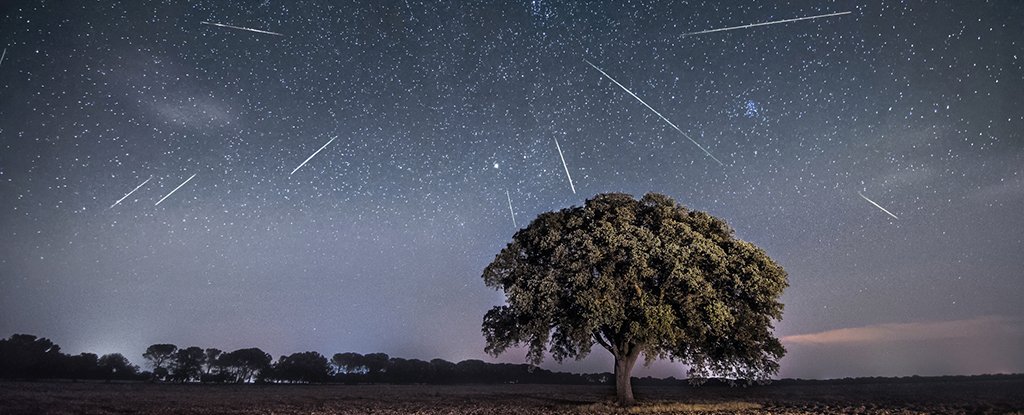
- 04 May 2024
Why is it in the News?
The Eta Aquariid meteor shower, which has been active since April 15, will peak on May 4 and 5.
About Eta Aquariid Meteor Shower:
- The Eta Aquariids are a meteor shower associated with Halley's Comet.
- The shower is visible from about April 19 to about May 28 each year with peak activity on or around May 5.
- It is formed when Earth passes through the orbital plane of the famous Halley’s Comet, which takes about 76 years to orbit the Sun once.
- It seems to be originating from the Aquarius constellation, hence ‘Eta Aquariid’.
- The Eta Aquariid meteor shower is known for its rapid speed.
- This makes for long, glowing tails which can last up to several minutes.
- About 30 to 40 Eta Aquarid meteors can be seen per hour during the peak of the meteor shower if observed from the Southern Hemisphere.
- The number decreases to about 10 meteors per hour if being viewed in the Northern Hemisphere.
- This is due to the location of the “radiant” — the position in the sky where the meteor shower seems to come from.
- In the Northern Hemisphere, Eta Aquarid meteors most often appear as ‘Earthgrazers’ long meteors that appear to skim the surface of the Earth.
- In the South, however, they can be seen higher up in the sky and hence are more visible.
What are Comets?
- Comets are frozen leftovers from the formation of our solar system, some 4.6 billion years ago.
- They are composed of dust, rock and ice and orbit around the Sun in highly elliptical orbits which can, in some cases, take hundreds of thousands of years to complete.
- Billions of them are theorised to be orbiting the Sun beyond Neptune, in the Kuiper Belt and even more distant Oort cloud.
- Comets come in different sizes, although most are roughly 10 km wide.
- However, as they come closer to the Sun, comets “heat up and spew gases and dust into a glowing head that can be larger than a planet.
- This material also forms a tail that stretches millions of miles.
How are Meteor Showers Related to Comets?
- Meteors are simply grains of dust or rock that burn up as they enter the Earth’s atmosphere.
- This burning also creates a brief tail.
- Since most meteors are tiny they completely burn up in Earth’s atmosphere. However, once in a while, a large enough meteor passes through and hits the ground (at which time it is called a meteorite), often causing significant damage.
- A meteor shower can be observed when Earth passes through the clouds of dust left behind in a comet’s orbital plane.
- The sky lights up with small and large meteor tails as the debris left behind by the comet interacts with Earth’s atmosphere.
World Press Freedom Index 2024
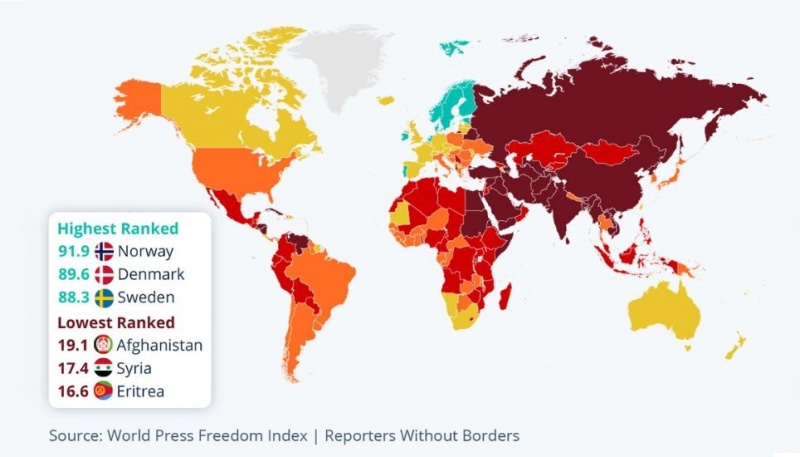
- 04 May 2024
Why is it in the News?
India’s score on the World Press Freedom Index fell over the last year, from 36.62 to 31.28, according to World Press Freedom Index.
About World Press Freedom Index 2024:
- The World Press Freedom Index, an annual report published by Reporters Without Borders (RSF), evaluates the ability of journalists to work and report freely and independently across 180 countries.
- The index ranks nations based on a press freedom questionnaire covering five categories:
- Political context
- Legal framework
- Economic context
- Ssociocultural context, and
- Security
- It is important to note that the index focuses solely on press freedom and does not assess the quality of journalism or human rights violations in general.
Key Findings in the 2024 Index:
- Global decline: The report reveals an overall deterioration in press freedom worldwide, with an average drop of 7.6 points.
- Political repression: There has been a sharp increase in political repression against journalists and independent media outlets.
- Top-ranking countries:
- Norway ranks first, followed by Denmark and Sweden.
- European countries, particularly those within the European Union, continue to demonstrate strong press freedom.
- Regions with the worst performance: The Maghreb and Middle East regions face the most significant restrictions on press freedom imposed by government forces.
- Lowest-ranking countries:
- Eritrea ranks last, followed by Syria and Afghanistan.
India's Ranking:
- Although India's rank slightly improved from 161 in 2023 to 159 in 2024, this change is primarily due to other countries dropping in their rankings.
- India experienced a decline in all indicators except security.
- Notably, India ranks behind Turkey, Pakistan, and Sri Lanka, which hold positions 158, 152, and 150, respectively.
Artificial General Intelligence (AGI)
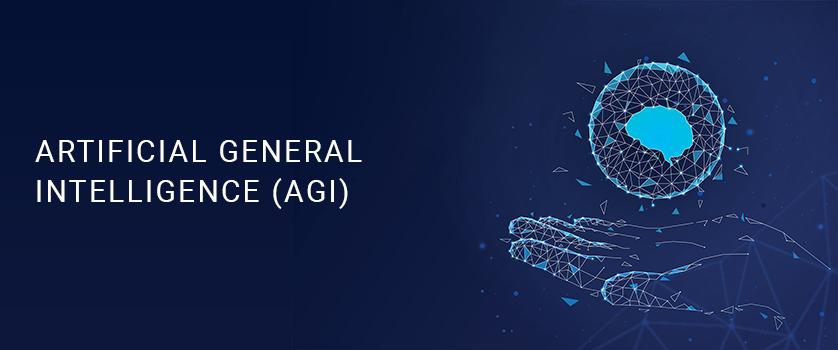
- 04 May 2024
Why is it in the News?
“GPT-4 is the dumbest model any of you will ever have to use again,” said the OpenAI’s CEO Sam Altman at a time when his company is going big on superintelligence or Artificial General Intelligence (AGI).
What Is Artificial General Intelligence (AGI)?
- Artificial general intelligence (AGI) is a team used to define the concept of development of AI to a level that can almost be capable of human intelligence and able to solve complex problems.
- Artificial intelligence (AI) is a broad field that encompasses various domains and applications, such as computer vision, natural language processing, machine learning, robotics, and more.
- AGI is a fictional Super Intelligence system that can match human intelligence.
- In Normal terms, AGI is also called strong AI, full AI, or general intelligent action.
- AGI systems are expected to have human-like or superhuman cognitive abilities, such as reasoning, planning, learning, communication, creativity, and problem-solving.
- AGI systems would be able to perform any task that humans can do, and even tasks that humans cannot do.
What is the Difference Between AI & AGI?
- AI systems are trained to perform specific tasks that require some level of intelligence, such as recognizing faces, translating languages, playing games, or diagnosing diseases.
- However, these systems are not able to generalize their skills and knowledge to other domains or tasks that they were not trained for.
- This is where artificial general intelligence (AGI) comes in.
- Artificial intelligence is an Umbrella containing the science of developing systems and processes that can replicate human intelligence.
- It's an umbrella containing multiple subdomains specifically built to develop such intelligence systems.
- Artificial General Intelligence is more like the system's ability to learn by itself, and behave like human intelligence. It's an evolved system with the help of heavily trained AI over time.
How can AGI Help Humanity?
- In theory, AGI has innumerable positive implications.
- For instance, in healthcare, it can redefine diagnostics, treatment planning, and personalised medicine by integrating and analysing vast datasets, far beyond the capabilities of humans.
- In finance and business, AGI could automate various processes and enhance overall decision-making, offering real-time analytics and market predictions with accuracy.
- When it comes to education, AGI could transform adaptive learning systems that work towards the unique needs of students.
- This could potentially democratise access to personalised education worldwide.
Blue Corner Notice
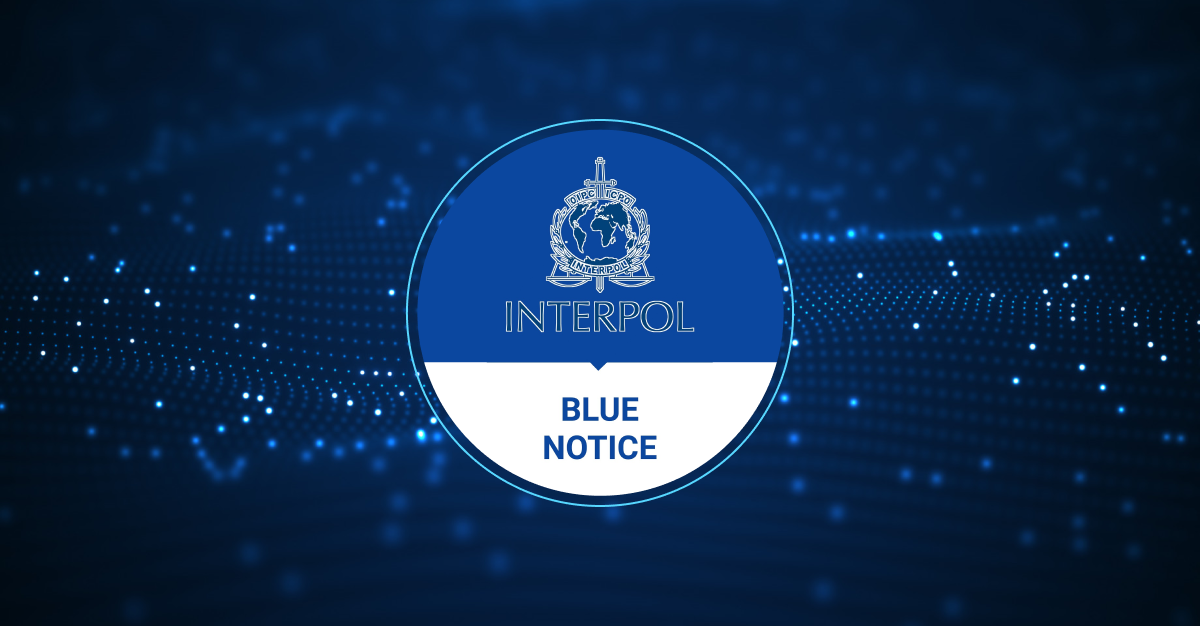
- 04 May 2024
Why is it in the News?
The Central Bureau of Investigation (CBI) is likely to issue a Blue Corner notice against absconding Janata Dal (Secular) MP Prajwal Revanna.
What is Interpol’s Colour-coded Notices?
- A Blue or a Blue Corner notice is a part of Interpol’s elaborate system of colour-coded notices, which enable countries to “share alerts and requests for information [on wanted persons/crimes] worldwide”.
- This sharing of critical crime-related information is crucial for tackling internationally spread-out criminal activities.
- There are seven types of notices — Red Notice, Yellow Notice, Blue Notice, Black Notice, Green Notice, Orange Notice, and Purple Notice. Each has a different implication.
- Red Notice: To seek the location and arrest of persons wanted for prosecution or to serve a sentence.
- Yellow Notice: To help locate missing persons, often minors, or to help identify persons who are unable to identify themselves.
- Blue Notice: To collect additional information about a person’s identity, location or activities in relation to a criminal investigation.
- Black Notice: To seek information on unidentified bodies.
- Green Notice: To provide a warning about a person’s criminal activities, where the person is considered to be a possible threat to public safety.
- Orange Notice: To warn of an event, a person, an object or a process representing a serious and imminent threat to public safety.
- Purple Notice: To seek or provide information on modus operandi, objects, devices and concealment methods used by criminals.
- These notices are issued by Interpol’s General Secretariat at the request of a member country’s Interpol National Central Bureau and are made available for all member countries.
What is Interpol?
- Interpol, or the International Criminal Police Organization, is an intergovernmental organization that facilitates global police cooperation and crime control.
- Founded in 1923, Interpol enables member countries to share data and collaborate on investigating cross-border crimes, such as terrorism, drug trafficking, cybercrime, and human trafficking.
- Interpol is composed of a network of 194 member countries, each having a National Central Bureau (NCB) that serves as the point of contact for international investigations. Key functions of Interpol include:
- Providing a secure communication system for member countries to exchange information on criminal activities.
- Facilitating operational support and assistance for member countries in managing crime-related crises and emergencies.
- Coordinating training and capacity-building initiatives to enhance the capabilities of law enforcement agencies.
- Issuing colour-coded notices (e.g., Red Notice for wanted persons) to alert member countries about international criminals and activities.
- Providing access to databases containing vital data on known criminals, fingerprints, DNA profiles, and stolen and lost travel documents.
- Interpol functions within the framework of international law and operates in accordance with the principle of neutrality, ensuring that it does not interfere in the political, military, religious, or racial affairs of member countries.
- Its main objective is to provide a platform for international police cooperation and create a safer world for all.
Oxytocin
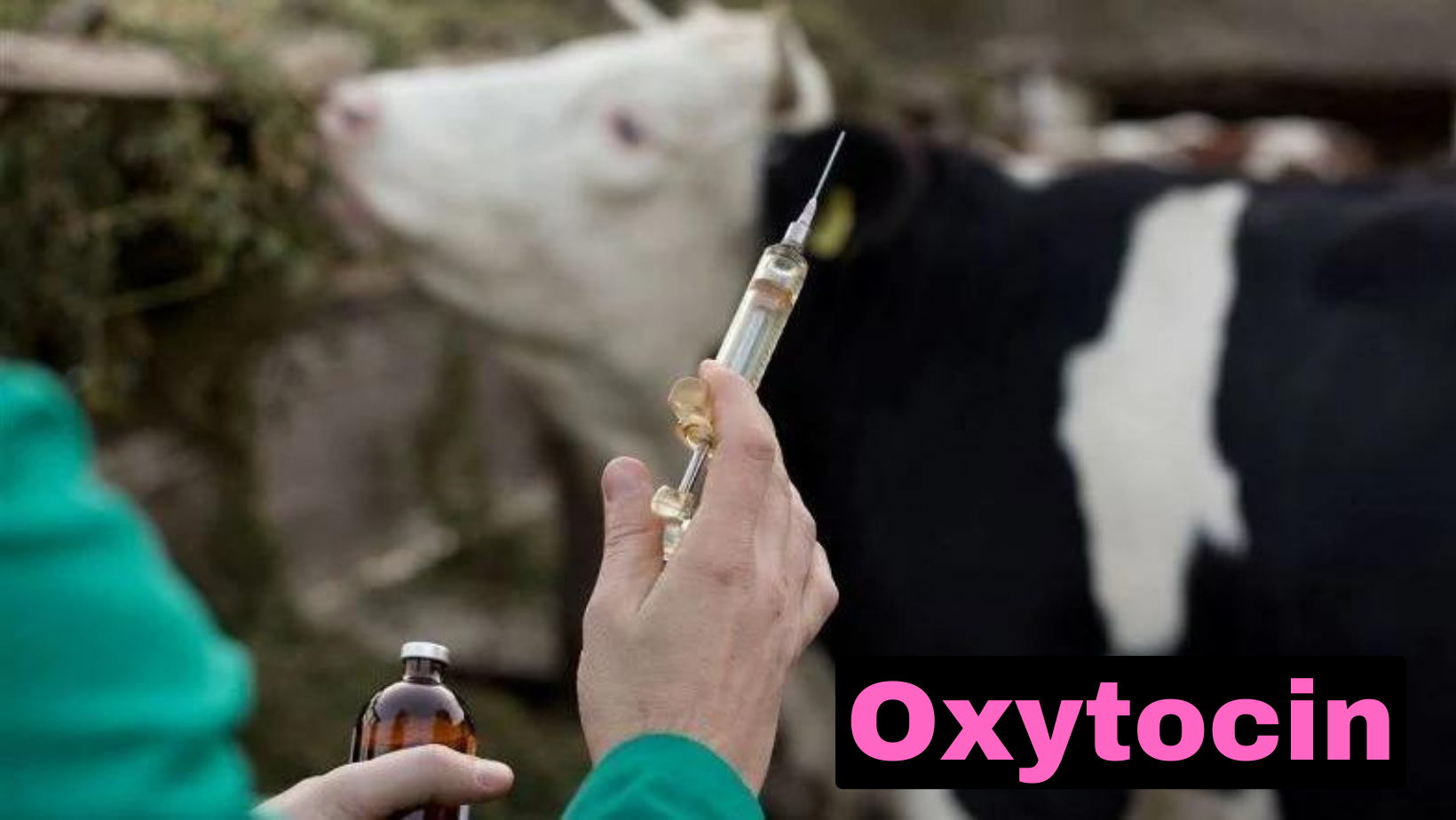
- 04 May 2024
Why is it in the News?
Recently, the Delhi High Court called for action against the 'rampant use of Oxytocin' in dairy colonies.
What is Oxytocin?
- Oxytocin also known as the ‘love hormone’ is secreted by the pituitary glands of mammals during sex, childbirth, lactation, or social bonding.
- It is normally produced in the hypothalamus and released by the posterior pituitary.
- It can be chemically manufactured and sold by pharma companies for use during childbirth.
- It is administered either as an injection or a nasal solution.
Side effects of oxytocin:
- A few side effects of oxytocin in humans would include:
- Allergic reactions on the skin like rashes Itching, hives Swelling, lips, tongue, or throat
- Changes in the heart rhythm causing fast or irregular heartbeat, dizziness, feeling faint or lightheaded
- Pain in the chest
- Breathlessness and trouble breathing
- Nausea Vomiting
- Severe headache
- Blurred vision
- Pounding in the neck or ears
- Jaundice Seizure
- According to doctors, prolonged use of oxytocin injections also causes fertility disorders like poor oestrus signs, reduced lactation period, lower conception rate, and high embryonic mortalities.
- Oxytocin injection given to cattle to boost the delivery of milk production is one of the reasons for the early onset of puberty among girls, the development of breasts in males, and the lack of testosterone production due to hormonal imbalance.
Affects fertility in both men and women:
- Milk adulterated with oxytocin is to be avoided by pregnant women as it can cause abortion and babies may be born with deformities.
- It also increases the risk of haemorrhage in mothers after birth and can also inhibit breastfeeding.
- However, boiling milk can help eliminate traces of oxytocin.
What are Hormones?
- Hormones are special chemicals produced by glands in the endocrine system that act as messengers in the body, regulating various physiological processes like growth, metabolism, reproduction, and mood.
- They travel through the bloodstream to target organs and tissues, where they exert their effects by binding to specific receptors and influencing cellular activity.
Shaksgam Valley
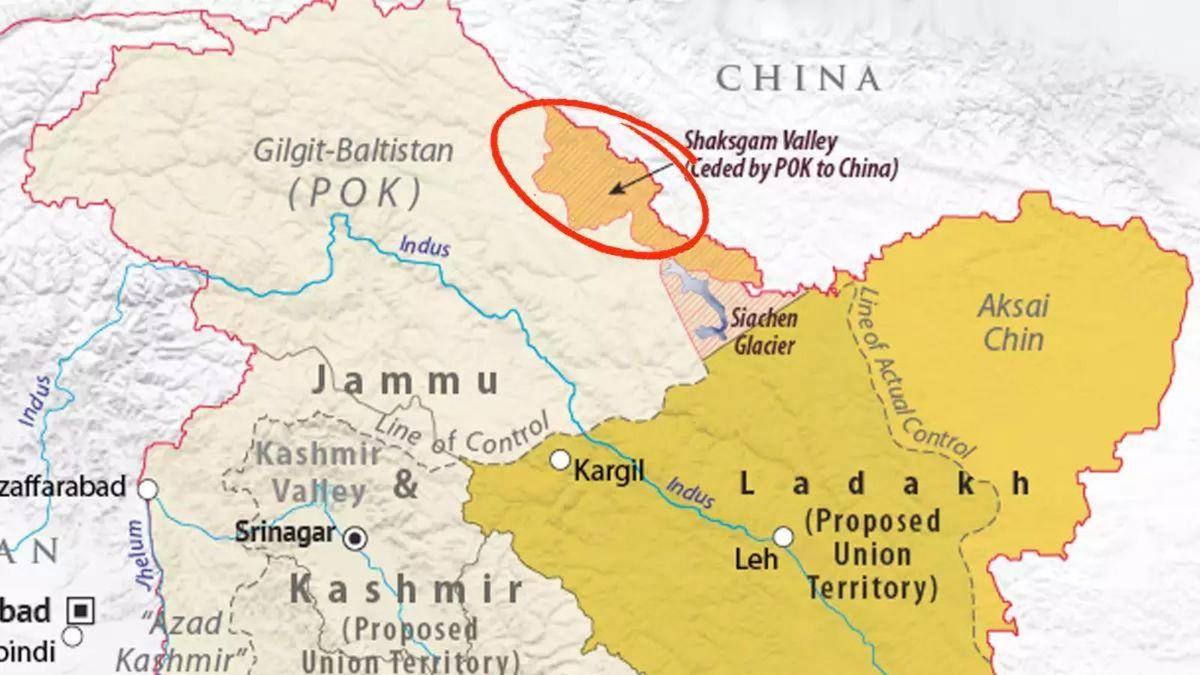
- 03 May 2024
Why is it in the News?
India recently said it has lodged a strong protest with China for carrying out construction activities in the Shaksgam Valley in an "illegal" attempt to alter the situation on the ground.
Context:
- Recently, the Ministry of External Affairs (MEA) said that the Shaksgam Valley is a part of the territory of India amid reports of China building infrastructure in the valley.
- The Shaksgam Valley strategically located region that is now part of Pakistan-occupied Kashmir.
- MEA spokesperson Randhir Jaiswal recently said that India "never accepted the so-called China-Pakistan Boundary Agreement of 1963 through which Pakistan unlawfully attempted to cede the area to China".
- Lodging a strong protest with China for carrying out construction activities, India called it an "illegal" attempt to alter the situation on the ground.
Where is the Shaksgam Valley Located?
- The Shaksgam Valley, or the Trans Karakoram Tract, is part of the Hunza-Gilgit Region of PoK.
- It is bordered by the Xinjiang Province of the People's Republic of China to the north.
- The northern areas of PoK are to its west and south.
- And the Siachen Glacier region to the east.
How did Pakistan cede Shaksgam valley to China?
- In 1963, Pakistan ceded the Shaksgam Valley to China when it signed a border agreement with Beijing to settle their border disputes.
- But, Article 6 of the 1963 agreement clearly stated that “the two Parties have agreed that after the settlement of the Kashmir dispute between Pakistan and India, the sovereign authority concerned will reopen negotiations with the Government of the People's Republic of China, on the boundary as described in Article 2 of the present Agreement, to sign a formal Boundary Treaty to replace the present agreement.”
- The agreement laid the basis for the construction of the Karakoram Highway, which was jointly built by Chinese and Pakistani engineers during the 1970s.
What is the History of Shaksgam Valley?
- When the British asked the Mir of Hunza, a vassal of the Maharaja of Kashmir, to give up his rights to the Taghdumbash Pamirs and the Raskam valley in 1936, the Shaksgam valley to the south-west had remained in his possession.
- This remained the traditional frontier of British India until independence and was inherited by India following Jammu & Kashmir's accession in 1947.
- And, this was the border that Pakistan compromised in its 1963 agreement with China.
- Pakistan established diplomatic relations with the People's Republic of China in 1951.
- Back then, Pakistan was viewed as a member of the non-Soviet block due to its membership in two anti-communist military pacts -- SEATO and CENTO -- led by the United States.
- China was on the opposite side.
- After Chinese troops invaded Tibet in 1950, Pakistan even offered transit facilities to US aircraft so they could supply equipment to Tibetan rebels.
- Chinese troops began to cross the border in eastern Hunza after the Partition of India.
- This started in 1953 and in 1959 they took some livestock out of the area.
- This prompted a furious response from Pakistan, which was determined to protect its borders.
- The then President of Pakistan, Ayub Khan, however, saw an opportunity to appease the Chinese in the late 1950s as India-China relations were rapidly deteriorating.
- Subsequently, Beijing developed closer ties with Islamabad after the India-China War of 1962.
- China went on to support Pakistan diplomatically during the 1965 India-Pakistan war.
- Amid these developments, Pakistan chose to downgrade historical claims made by the Mir of Hunza and signed over the Shaksgam Valley to China in 1963.
What was the Consequence?
- In granting China's claim to a border along the Karakoram Range, Pakistan compromised India's traditional frontier along the KunLun Range to the northwest of the Karakoram Pass.
- It also allowed China to extend a claim eastward along the Karakoram in Ladakh.
- This enabled China to claim all of Aksai-Chin.
Electrolysers

- 03 May 2024
Why is it in the News?
Developing a domestic manufacturing infrastructure for electrolyzers is expected to reduce the cost of green hydrogen and strengthen India's competitive advantage.
What are Electrolysers?
- Electrolysers are devices that produce hydrogen through a chemical process called electrolysis, which splits water molecules into hydrogen and oxygen molecules using electricity.
How do They work?
- These devices consist of a stack of conductive electrodes separated by a membrane, to which a high voltage and current are applied.
- This induces an electric current in the water, causing it to decompose into its constituents: hydrogen and oxygen.
- The generated oxygen is either released into the atmosphere or stored for future use as a medical or industrial gas.
- The hydrogen produced can be stored as a compressed gas liquefied for industrial use or utilised in hydrogen fuel cells, which power various transportation vehicles like trains, ships, and aircraft.
Types of Electrolysers:
- Alkaline Electrolysers: This technology, predominantly used by the fertiliser and chlorine industries, employs thick membranes and nickel-based electrodes.
- It currently represents a significant portion of global electrolyser capacity.
- Proton Exchange Membrane (PEM) Electrolysers: Operating at high pressure, PEM electrolysers utilise thin perfluorosulfonic acid (PFSA) membranes.
- Though they require gold and titanium-plated electrodes and catalysts like platinum, iridium, and ruthenium, they produce high-purity hydrogen and are easy to cool, making them a popular choice.
- Solid Oxide Electrolysis Cell (SOEC) Electrolysers: These devices utilise heat to produce hydrogen from steam and are ideal for locations with available heat sources such as nuclear or industrial facilities.
- Operating at high temperatures ranging from 500 to 850 degrees Celsius.
- Anion Exchange Membrane (AEM) Electrolysers: Operating at significantly lower temperatures of 50 to 60 degrees Celsius, AEM electrolysers combine the less harsh conditions of alkaline electrolysers with the simplicity and high efficiency of PEM electrolysers.
Electrolyzers and Green Hydrogen Production:
- Green hydrogen is renewable hydrogen produced using water electrolysis technology and electricity generated from renewable energy sources, such as solar or wind.
- It is gaining unprecedented momentum globally, and it is believed that it is a key component in accelerating the shift to clean energy.
- The commercialization of electrolyzers can make green hydrogen more readily available and enable energy systems across the globe to undergo fundamental transformations to lower emissions and reduce their negative impact on the environment.
Diplomatic Passport
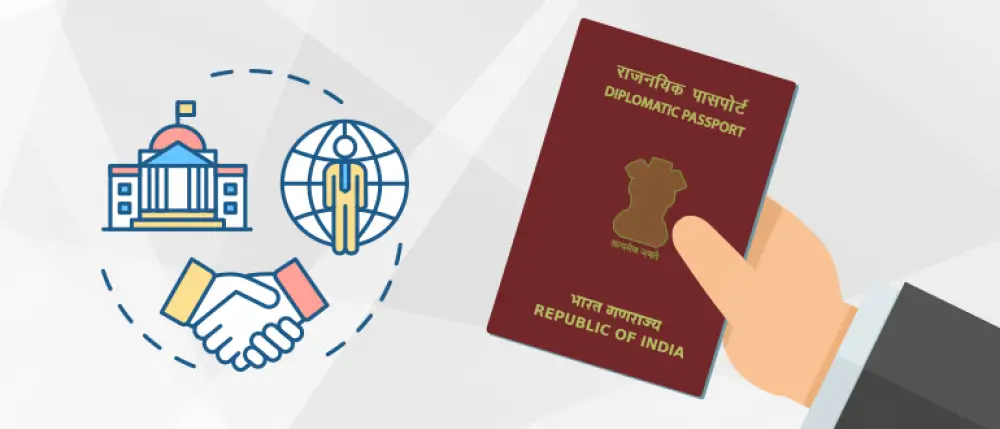
- 03 May 2024
Why is it in the News?
After allegations of sexual abuse by Janata Dal (Secular) MP Prajwal Revanna came to light, the politician fled to Germany on a diplomatic passport.
What is a Diplomatic Passport?
- Diplomatic passports are issued to people holding diplomatic status or deputed by the Government of India for official duty abroad.
- Unlike normal passports, which are valid for 10 years and have a dark blue cover, diplomatic passports are valid for five years or less and have maroon covers.
- Diplomatic passports, also known as 'Type D' passports.
- A diplomatic passport has 28 pages.
- Holders of such passports are entitled to certain privileges and immunities as per international law, including immunity from arrest, detention, and certain legal proceedings in the host country.
Issuing Authority:
- The Ministry of External Affairs’s (MEA) Consular, Passport & Visa Division issues diplomatic passports (‘Type D’ passports) to people falling in broadly five categories:
- Those with diplomatic status;
- Government-appointed individuals travelling abroad for official business;
- Officers working under the branches A and B of the Indian Foreign Service (IFS), normally at the rank of Joint Secretary and above; and
- Relatives and immediate family of officers employed in IFS and MEA.
- Select individuals who are authorised to undertake official travel on behalf of the government”.
- The MEA issues visa notes to government officials going abroad for an official assignment or visit.
What are the Benefits of Having a Diplomatic Passport?
- Official identification: The diplomatic passport serves as an official identification document for individuals representing the Indian government on diplomatic missions.
- It helps in establishing their identity and official status.
- Diplomatic immunity: Diplomatic passport holders are typically entitled to certain privileges and immunities as per international law.
- This includes immunity from arrest, detention, and certain legal proceedings in the host country, safeguarding their ability to perform official duties without hindrance.
- Visa facilitation: Diplomatic passports often enjoy certain privileges when it comes to visa facilitation.
- Many countries offer expedited visa processing or waive visa requirements altogether for diplomatic passport holders, simplifying travel arrangements for official purposes.
- Access to diplomatic channels: The diplomatic passport grants access to diplomatic channels and services provided by Indian embassies, consulates, and other diplomatic missions worldwide.
- This includes assistance with consular services, protection, and support while abroad.
- Priority services: Diplomatic passport holders may receive priority services at airports and during immigration procedures.
- This can include dedicated immigration counters or expedited security and customs clearance, saving time during travel.
- Official representation: The diplomatic passport signifies the official representation of the Indian government and confers a sense of authority and credibility while dealing with international counterparts, foreign officials, and diplomatic communities.
Can Diplomatic Passports be Revoked?
- According to The Passports Act, 1967, the passport authority may cancel a passport or travel document, with the previous approval of the Central government.
- The passport authority can impound or revoke a passport if the authority believes that:
- The passport holder or travel document is in wrongful possession
- If the passport was obtained by the suppression of material information or based on wrong information provided by the individual
- If it is brought to the notice of the passport authority that the individual has been issued a court order prohibiting his departure from India or has been summoned by the court.
- A diplomatic passport can be revoked upon orders from a court during proceedings with respect to an offence allegedly carried out by the passport holder before a criminal court.
Monkeypox (Mpox)
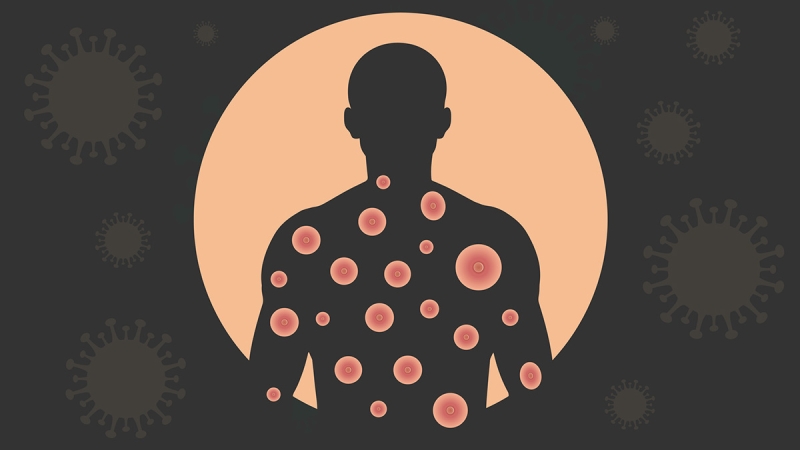
- 03 May 2024
Why is it in the News?
The Democratic Republic of the Congo (DRC) is struggling to contain its biggest Mpox outbreak.
What Is Monkeypox (Mpox)?
- Mpox (formerly known as monkeypox) is a rare viral infection caused by the mpox virus, a member of the orthopoxvirus genus.
- It was first discovered in 1958 in monkeys but can also infect humans and other animals.
- Mpox typically presents with a range of symptoms and can be transmitted through close contact with infected individuals or animals.
Symptoms:
- Mpox symptoms often begin with fever, muscle aches, and sore throat, followed by a rash that starts on the face and spreads across the body.
- The rash evolves over two to four weeks, forming macules, papules, vesicles, and pustules before crusting over.
- Lesions can also appear on the palms of the hands and soles of the feet.
Causes:
- The mpox virus is primarily transmitted through direct contact with the skin lesions, body fluids, or respiratory droplets of infected individuals or animals.
- It can also be contracted through contaminated materials, such as bedding or clothing.
Prevention:
- Preventing mpox involves avoiding contact with infected individuals or animals, practising good hygiene, and disinfecting contaminated surfaces.
- Vaccines are also available for individuals at high risk of contracting the virus.
Treatment:
- There is currently no specific treatment for mpox, but symptoms can be managed with supportive care, such as fever reducers and pain medications. In some cases, antiviral medications may be used.
Five Eyes Intelligence-sharing Network
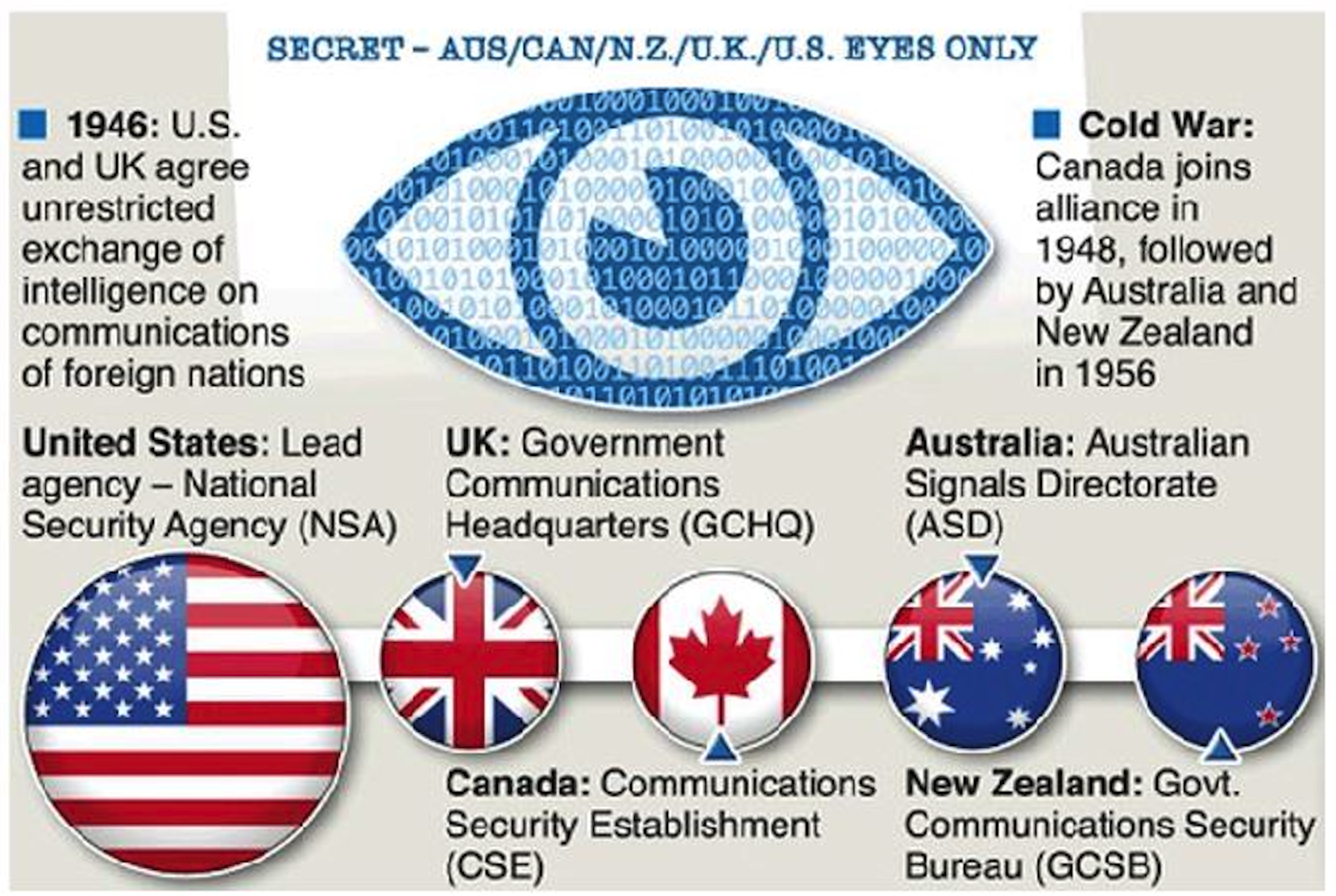
- 03 May 2024
Why is it in the News?
Recently, the Australian Broadcasting Corporation (ABC) reported that “Indian spies” had been “kicked out of Australia” after being caught trying to steal secrets about sensitive defence projects and airport security, as well as classified information on Australia’s trade relationships”.
What is the Five Eyes?
- The Five Eyes is an intelligence alliance comprising Australia, Canada, New Zealand, the United Kingdom and the United States, formed in 1946.
- The alliance is based on a series of bilateral agreements on surveillance and intelligence-sharing.
- These arrangements are commonly known as the United Kingdom-United States Communication Intelligence Act (UKUSA) agreement.
- The UKUSA agreement is a secret pact that, since 1946, has allowed the two countries to share intelligence with each other.
- The UKUSA agreement was so secret that its existence wasn't even acknowledged until 2005.
- Each of the Five Eyes states pursues interception, collection, and decryption activities and shares all intelligence information obtained with the others by default.
- These countries share information with each other through the ultra-sensitive STONEGHOST network, which has been claimed to contain "some of the Western world's most closely guarded secrets".
- The Five Eyes states share integrated programmes, staff, and bases.
Origins of the Five Eyes
- During World War II, informal secret meetings between British and American code-breakers laid the groundwork for establishing the FE alliance.
- After the Cold War, the information-sharing arrangement became formalised under the ECHELON surveillance system in the 1960s.
How does the Five Eyes Alliance operate?
- The alliance facilitates the sharing of signals intelligence among the five countries.
- The countries agree to exchange by default all signals intelligence they gather.
- The bedrock of the Five Eyes Alliance is based on the joint abilities of the United Kingdom's Government Communications Headquarters (GCHQ) and the USA's National Security Agency (NSA) to intercept intelligence.
- These agencies collect and decrypt signal intelligence, called SigInt, which involves internet, telephone, radio and satellite data from across the world.
- The UKUSA Agreement, which was made public in 2010, states:
- "It will be contrary to this agreement to reveal its existence to any third party whatsoever" and "each party will seek the agreement of the other to any action with third parties and will take no action until its advisability is agreed upon."
Supersonic Missile-Assisted Release of Torpedo (SMART) System
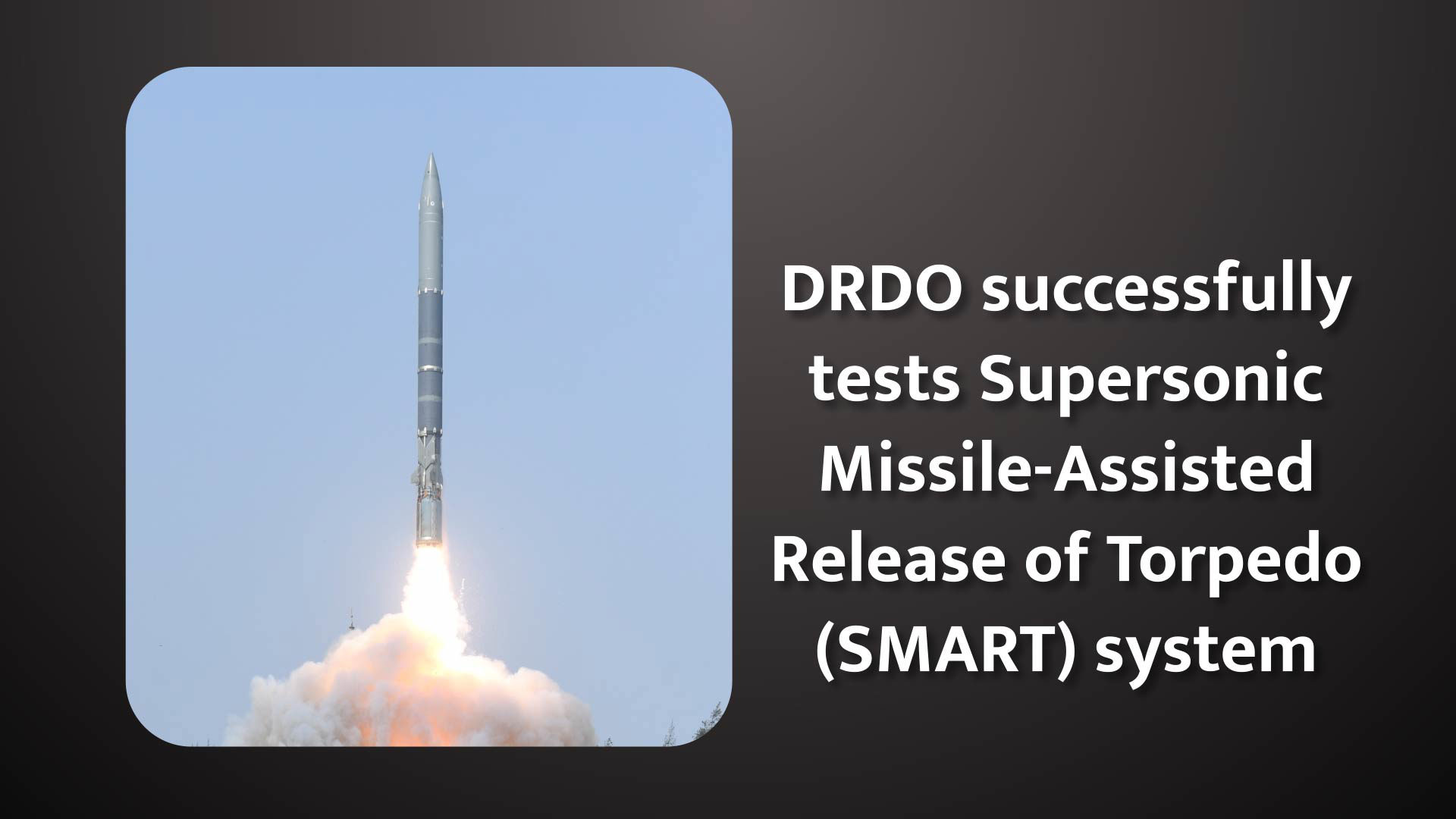
- 02 May 2024
Why is it in the News?
The Defence Research and Development Organisation (DRDO) recently tested a next-generation torpedo release system aimed at boosting the Navy’s anti-submarine warfare capabilities.
What is a SMART System?
- The SMART system, designed to bolster the Indian Navy's anti-submarine warfare capabilities, represents a fusion of cutting-edge technology and indigenous innovation.
- With its supersonic capabilities and torpedo release mechanism, the SMART system offers a formidable deterrent against potential submarine threats, enhancing the Indian Navy's operational readiness and maritime defence posture.
- The SMART system comprises a mechanism by which the torpedo is launched from a supersonic missile system with modifications that would take the torpedo to a far longer range than its own.
- For example, a torpedo with a range of a few kilometres can be sent a distance to the tune of 1000 km by the missile system from where the torpedo is launched.
- The system also gives flexibility in terms of the missile system’s launch platform.
- A number of DRDO laboratories including Defence Research and Development Laboratory (DRDL) and Research Centre Imarat (RCI), both in Hyderabad; Aerial Delivery Research and Development Establishment (ADRDE) in Agra; and Naval Science and Technology Laboratory (NSTL) Visakhapatnam have developed the technologies required for SMART.
Key Features of SMART Anti-submarine Missile System:
- It is a canister-based, long-range anti-submarine missile system.
- It has been developed by the DRDO for the Indian Navy.
- The objective behind the project is to develop a quick reaction system that can launch a torpedo from a standoff distance.
- The missile has a range of 643 km carrying a lightweight torpedo of range 20 km with a 50 kg high explosive warhead.
- SMART uses a two-way data link connected to airborne or ship-based submarine detection and identification systems.
- It can be launched from a surface ship or a truck-based coastal battery.
- The missile is powered by a dual-stage solid-propellant rocket and utilizes electro-mechanical actuators for course correction.
- The missile utilizes sea skimming to reduce detection range.
- The first successful test of SMART was done on 5 October 2020 from Abdul Kalam Island.
Significance:
- This missile-based mechanism to launch lightweight torpedoes can target submarines hundreds of kilometres away — far beyond the conventional range of lightweight torpedoes.
- It will be particularly employed in the absence of other assets for immediate action when an enemy submarine is detected.
Red Colobus
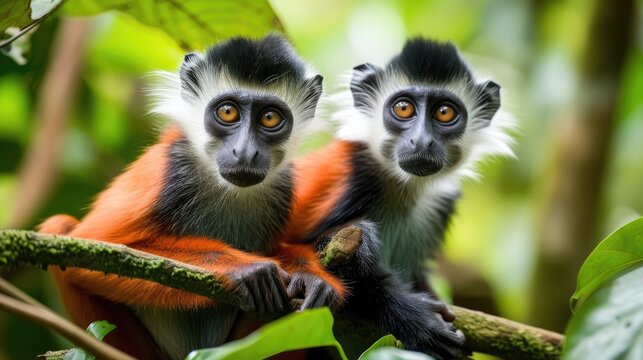
- 02 May 2024
Why is it in the News?
The Red colobus, a rare group of imperilled monkeys spread across Africa, is the primary indicator of biodiversity decline in the continent’s tropical forests.
What is Red Colobus?
- Red colobus monkeys (Piliocolobus spp.), a rare and imperilled group of primates endemic to Africa, serve as crucial indicators of the continent's biodiversity.
- They are part of the broader colobine family, which predominantly consists of leaf-eating species, distinguishing them from the omnivorous cercopithecines.
- Alongside Africa's red colobus monkeys, the colobine group also encompasses langurs found in South and Southeast Asia.
- These distinctive primates are distributed across diverse habitats, ranging from the forests of Senegal to the Zanzibar Archipelago.
- Despite their ecological significance, red colobus monkeys face a dire threat of extinction, with more than half of the known 18 distinct forms listed as Endangered or Critically Endangered on the IUCN Red List.
- Their survival is imperilled by various factors, primarily driven by human activities.
- Hunting for both trade and local consumption poses a significant threat, as does the relentless encroachment on their habitats.
- Habitat loss, degradation, and fragmentation result from activities such as logging, mining, charcoal production, and the conversion of forests into agricultural lands.
- These threats collectively endanger the existence of red colobus monkeys, highlighting the urgent need for conservation efforts to safeguard their future.
Conservation of Red Colobus Monkeys:
- The International Union for Conservation of Nature (IUCN) Species Survival Commission Primate Specialist Group and the African Primatological Society have come together to initiate the Red Colobus Conservation Action Plan.
- This collaborative effort focuses on making red colobus monkeys a priority target in conservation, ultimately contributing to the preservation of Africa's tropical forests and addressing unsustainable hunting practices.
- To effectively implement the action plan, a Red Colobus Working Group (RCWG) has been established.
- This group will provide guidance and ensure that the plan's objectives are met. Additionally, a Red Colobus Conservation Network (RCCN) has been created to promote communication, capacity-building, and monitoring of the conservation efforts for red colobus monkeys.
- Through this joint venture, the IUCN and the African Primatological Society aim to secure the future of red colobus monkeys while safeguarding the ecosystems they inhabit.
Ajrakh from Kutch
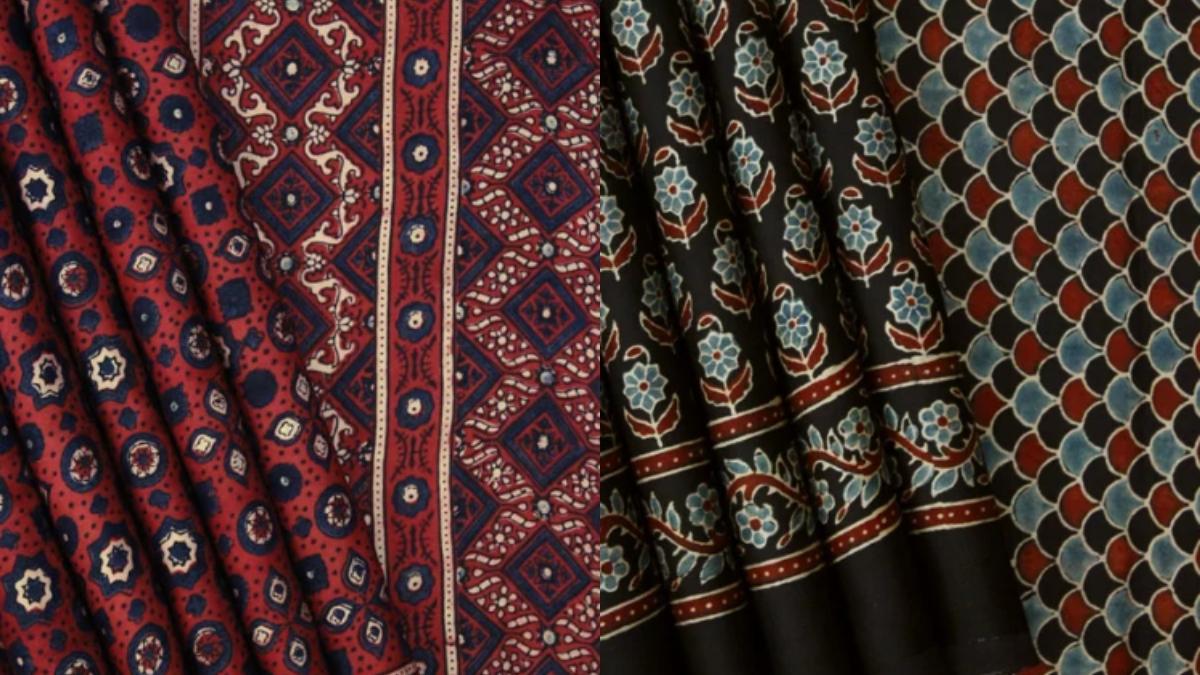
- 02 May 2024
Why is it in the News?
The recent addition of Ajrakh from Kutch to the list of GI-tagged fabrics is a proud moment for India's rich textile heritage.
What is Ajrakh?
- The Ajrakh fabric is a traditional hand-block printing technique that originated in Kutch, Gujarat.
- It uses natural dyes and intricate patterns to create beautiful textiles, which are then used to make sarees, dupattas, stoles, and other garments.
- The unique feature of Ajrakh is its use of geometric patterns and rich earthy colours like indigo, madder, and mustard.
- This fabric has been an integral part of the Kutchi culture for centuries and has now gained recognition on a global level with its GI tag.
What is a GI tag?
- The GI tag is a certification that identifies a product as originating from a specific geographical location and possessing unique qualities due to that region's traditional knowledge and expertise.
- It not only adds value to the product but also protects it from imitation or misuse.
- Ajrakh's GI tag was granted by the Geographical Indications Registry after a long process of documentation and verification of its origin and production techniques.
Some other Indian textiles have received similar recognition.
- Banarasi Silk: The luxurious Banarasi silk sarees from Varanasi have been coveted by women all over the world for their exquisite designs and fine quality.
- This fabric has been granted a GI tag for its uniqueness in design, weaving technique, and use of pure silk and zari.
- The intricate designs of Banarasi silk sarees, inspired by Mughal and Persian art, make them stand out in the sea of Indian textiles.
- Chanderi Fabric: Chanderi, a small town in Madhya Pradesh, is known for its delicate and lightweight fabric.
- Chanderi sarees and suits are made from a combination of cotton and silk, giving them a sheer and lustrous appearance.
- This fabric has been granted a GI tag for its traditional handloom weaving technique, which dates back to the 13th century.
- The motifs used in Chanderi fabrics are inspired by nature and are intricately woven using golden zari.
- Kanjeevaram Silk: The Kanjeevaram sarees from Tamil Nadu are famous for their vibrant colours, fine silk, and intricate zari work.
- This fabric has been granted a GI tag for its traditional weaving technique that uses three shuttles to weave the body, border, and pallu of the saree separately and then join them together.
- The rich gold zari work on Kanjeevaram sarees makes them a must-have in every Indian woman's wardrobe.
- Kota Doria: One of the many varieties of sari clothing produced in Muhammadabad Gohna, Mau in Uttar Pradesh and the surrounding area, as well as in Kota, Rajasthan, is kota doria.
- Pure cotton and silk are used to make sarees, which are adorned with square-like designs called khats.
- Since these sarees were woven in Mysore, they were originally known as Masuria.
- The GI tag was given to Kota Doria in July 2005. Kota Doria cotton sarees are regarded as the lightest in India because of their transparency and low weight.
- Odisha Ikat: One type of ikat, which is a resist dyeing method, comes from Odisha and is called Orissa Ikat.
- It is sometimes referred to as "Bandha of Orissa" and has been an Orissan product since 2007.
- To produce the design on the loom before weaving, the warp and weft threads are tie-dyed.
Antares

- 02 May 2024
Why is it in the News?
The Bengaluru-based Indian Institute of Astrophysics (IIA) has filmed the passing of the moon in front of Antares, a bright red star.
What is Antares?
- Antares, also known as Alpha Scorpii, is one of the brightest stars in our night sky.
- Located in the constellation Scorpius, Antares has captivated stargazers and astronomers for centuries with its fiery red hue and impressive size.
- The name Antares is derived from the Greek word meaning “rival to Mars” due to its reddish appearance, similar to the planet Mars.
- Ancient cultures associated Antares with various mythological figures, including the Greek god Ares and the Egyptian god Osiris.
- It is also one of the largest known stars, with a diameter estimated to be around 700 times that of our Sun.
- Antares is located approximately 550 light-years away from Earth, making it a relatively close neighbour in astronomical terms.
- It is classified as a red supergiant star, belonging to the spectral type M1.5 Iab-Ib.
- Its surface temperature is about 3,500 Kelvin.
- Antares is a variable star, which means its brightness fluctuates over time.
- Scientists estimate that Antares is approximately 12 million years old.
- As a red supergiant, it is in the later stages of its stellar evolution and is expected to explode as a supernova in the future.
- Antares has a mass estimated to be about 15 times that of our Sun.
- It is primarily composed of hydrogen and helium, with traces of heavier elements.
- Antares has a companion star in a binary system known as Antares B.
- The two stars orbit each other, with a separation of several astronomical units.
- The visual apparent magnitude of Antares is around 1.06, making it one of the 20 brightest stars in the night sky.
- Antares emits a significant amount of infrared radiation, making it a prominent object in infrared observations.
- Antares experiences intense stellar winds, which cause it to lose mass at a rate of approximately one Earth mass every hundred thousand years.
- Antares played a crucial role in ancient navigation, particularly in the Southern Hemisphere, serving as a marker for determining the position of celestial objects.
Booker Prize

- 02 May 2024
Why is it in the News?
The Booker Prize, one of the most prestigious awards in the literary world, has recently come under fire for the historical links to slavery of its original sponsor, Booker Group.
What is the Booker Prize?
- The Booker Prize was founded in 1969, initially just for writers from the Commonwealth, but later opened to writers globally.
- Each year, the prize is awarded to a single work of fiction in the English language.
- In 2004, a separate International Booker Prize was instituted for translated works.
- The prize was co-founded by publishers Tom Maschler and Graham C Greene, and from 1969 to 2001, it was sponsored by, and named after Booker Group Ltd, a British wholesale foods company, established in 1835 as a shipping and trading company, and now owned by Tesco.
- In 2002, British investment management firm Man Group became the prize’s sponsor, and thus it came to be known as The Man Booker Prize.
- After Man Group ended its sponsorship in 2019, American charity Crankstart took over, and reverted the award’s name to its original ‘Booker Prize’.
- Irish author Paul Lynch wins the 2023 Booker Prize for his novel 'Prophet Song'.
About the International Booker Prize:
- The International Booker Prize (formerly known as the Man Booker International Prize) was launched in 2005.
- It was originally awarded every two years to a living author who has published fiction either originally in English or whose work is generally available in translation in the English language.
- It was an award for the body of work of the author, rather than awarded for an individual novel.
- Beginning in 2016, the award changed. It is now given annually to a single book in English translation, with a £50,000 prize for the winning title, shared equally between author and translator.
- Georgi Gospodinov and Angela Rodel have won the International Booker Prize 2023 for the novel ‘Time Shelter’.
- ‘Tomb of Sand’ Geetanjali Shree, translated by Daisy Rockwell Winner 2022 winner.
Nutrient-based Subsidy
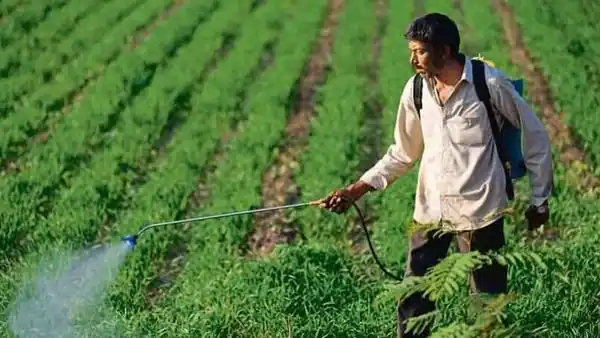
- 01 May 2024
Why is it in the News?
Capping consumption of urea and DAP to correct worsening plant nutrient imbalance is likely to be on the priority list of the government post the Lok Sabha polls.
What is Meant by the Term "Balanced Fertilization"?
- Fertilisers are basically food for crops, containing nutrients necessary for plant growth and grain yields.
- Balanced fertilisation means supplying these primary (N, phosphorus-P, and potassium-K), secondary (sulphur-S, calcium, magnesium), and micro (iron, zinc, copper, manganese, boron, molybdenum) nutrients in the right proportion, based on soil type and the crop’s own requirement at different growth stages.
What is a Nutrient-based Subsidy?
- Nutrient-based subsidy (NBS) is a system started in 2010 to help farmers use the right amount of nutrients in fertilizers.
- Instead of giving a subsidy for each type of fertilizer, the government decided to give subsidies based on nutrients like Nitrogen (N), Phosphorus (P), Potassium (K), and Sulfur (S) in the fertilizers.
- The idea was to encourage farmers to use fertilizers with a balanced mix of nutrients, instead of just focusing on certain types like urea, DAP, and MOP.
- These balanced fertilizers contain a mix of N, P, K, S, and other nutrients in the right amounts.
- At first, this plan seemed to work. Between 2010 and 2012, farmers started using more balanced fertilizers and less of the ones with just one or two nutrients.
- But there was a problem: urea, which is heavily used by farmers, was not included in this plan.
- Since the government controlled the price of urea and only went up a little bit after the NBS was introduced, farmers kept using it more and more.
- This means that even though the NBS helped with other fertilizers, it didn't do much to reduce the use of urea.
Challenges:
- The challenges arise from recent changes in fertilizer pricing and consumption patterns.
- Earlier, companies set prices for non-urea fertilizers, with the government providing subsidies based on their nutrient content.
- However, in the past few years, even non-urea fertilizers have come under price control, especially since January 2024, possibly due to upcoming elections.
- This shift has led to imbalances in nutrient usage.
- For example, the current price of DAP is lower than certain NPKS complex fertilizers, even though it contains less nitrogen and phosphorus.
- As a result, farmers tend to overuse DAP, similar to urea. On the other hand, the price of MOP does not incentivize its use, leading to its reduced incorporation into fertilizers, despite its importance for crop immunity and nitrogen uptake.
- To address these issues, it's crucial to establish a proper price hierarchy among non-urea fertilizers.
- DAP should be priced highest, followed by complexes, with MOP priced the lowest. Additionally, DAP usage should be limited to rice and wheat, while other crops can fulfil their phosphorus needs through complexes and SSP.
- Improving the acceptability of SSP, despite its lower price, can be achieved by marketing it in granular form, which is less prone to adulteration and ensures a slower release of phosphorus without drift during application.
Goldman Environmental Prize

- 01 May 2024
Why is it in the News?
Chhattisgarh-based environment and forest activist Alok Shukla has been honoured with the prestigious Goldman Environmental Prize for his efforts and exemplary community campaign in safeguarding the biodiversity-rich forests in the mineral-rich state.
About Goldman Environmental Prize:
- The Goldman Environmental Prize recognizes grassroots environmental heroes from roughly the world’s six inhabited continental regions:
- Africa
- Asia
- Europe
- Islands & Island Nations
- North America
- South & Central America
- It is also called the Green Nobel.
- The Prize recognizes individuals for sustained and significant efforts to protect and enhance the natural environment, often at great personal risk.
- The Goldman Prize views “grassroots” leaders as those involved in local efforts, where positive change is created through community or citizen participation.
- Through recognizing these individual leaders, the Prize seeks to inspire other ordinary people to take extraordinary actions to protect the natural world.
History:
- Reflecting a lifetime commitment to philanthropy and environmental issues, the Goldman Environmental Prize was founded in 1989 by Richard and Rhoda Goldman.
- The duo envisioned the Prize as a way to demonstrate the international nature of environmental problems and draw public attention to the global need for action.
- By rewarding ordinary individuals for their outstanding environmental achievements, the Goldmans hoped to inspire others to emulate the examples set by the Prize recipients.
- The first Goldman Environmental Prize ceremony took place on April 16, 1990, and it was timed to coincide with Earth Day.
- The recipients of the Goldman Environmental Prize are announced annually in a live ceremony timed to coincide with Earth Day.
- The Prize is awarded in the city of San Francisco, California.
- Prize winners each receive a bronze sculpture in the shape of an Ouroboros.
- Common to many cultures around the world, the Ouroboros, which depicts a serpent biting its tail, is a symbol of nature’s power of renewal.
Patachitra Painting
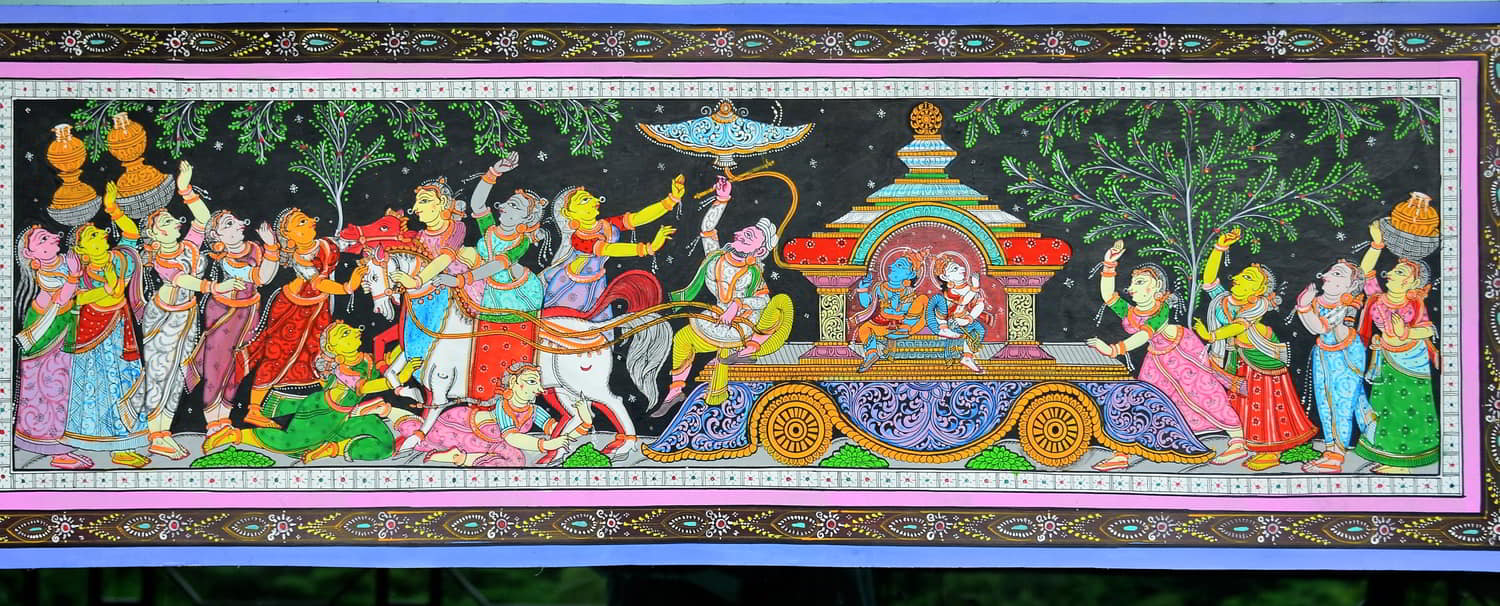
- 01 May 2024
Why is it in the News?
The first-generation women patachitra artists of the village sell their work online & are recognized the world over, encouraging future generations to stay in the profession.
About Patachitra Painting:
- Pattachitra style of painting is one of the oldest and most popular folk art forms of Odisha.
- Pattachitra- literally meaning ‘Picture on cloth canvas’ is a traditional treasure that has mesmerized the common man.
- The Patachitras, the intricate and artistic folk art, of Orissa are icon paintings that include wall paintings, manuscript paintings, palm-leaf etchings, and paintings on cloth, both cotton and silk.
- Pattachitra paintings are made of tussar silk.
- The origin of the paintings is traced to the 8th century A.D., from the fragmented pieces of evidence of cave paintings in Khandagari, Udaigiri, and Sitabhinji.
- Having a reference in the earliest known treatise on a painting called ‘Chitralakshana’, this art form finds its strong roots in the traditions of Lord Jagannath, the presiding deity of Odisha.
- These paintings have a ritualistic significance even to this day.
- The picturesque village of Raghurajpur, on the banks of river Bhargavi is well known for this artistry, along with its neighbours Puri, Dandasahi, and Khasposak.
- The Pattachitra artists are called ‘Chitrakaars’ (Painters), mainly belonging to the Maharana and Mahapatra castes.
- The creation of the Pattachitra paintings is a disciplined art form, and the chitrakars maintain rigidity in their use of colours and patterns, restricting the colours to a single tone.
Making of Paintings:
- Preparing the paints is perhaps the most important part of the creation of Pattachitra, engaging the craftsmanship of the chitrakars in using naturally available raw materials to bring about indigenous paints.
- The gum of the Katha tree is the chief ingredient and is used as a base for making different pigments, on which diverse raw materials are mixed for diverse colours.
- Powdered conch shells, for instance, are used for making a white pigment, while lamp soot is used for a black pigment.
- The root of the keya plant is usually used for making the common brush, while mouse hair is used on the requirement of finer brushes, to be attached to wooden handles.
Street Vendors (Protection of Livelihood and Regulation of Street Vending) Act, 2014

- 01 May 2024
Why is it in the News?
Enacted on May 1, 2014, after decades of advocacy, the Street Vendors Act has achieved progress yet faces implementation challenges in safeguarding vendors' livelihoods.
About Street Vendors (Protection of Livelihood and Regulation of Street Vending) Act, 2014:
- The Street Vendors (Protection of Livelihood and Regulation of Street Vending) Act, 2014 was enacted to legitimize the rights of street vendors (SVs) and regulate their activities.
- It is implemented by respective States/UTs by framing Rules, schemes, Bye-laws and Plan for Street Vending as per provisions of the Act.
- It seeks to safeguard and manage street vending in urban areas, with State-level regulations and initiatives overseen by Urban Local Bodies (ULBs) through the formulation of by-laws, urban planning, and regulatory measures.
- The Act clearly defines the roles and obligations of both vendors and various levels of government.
- One of the primary objectives of the Act is to ensure the inclusion of all "existing" vendors within designated vending zones by issuing vending certificates (VCs).
- It establishes Town Vending Committees (TVCs) as a mechanism for participatory governance, with street vendor representatives comprising 40% of the committee members, including a sub-representation of 33% for women SVs.
- These committees are tasked with overseeing the allocation of vending spaces and ensuring the representation of all existing vendors within vending zones.
- Moreover, the Act provides mechanisms for addressing grievances and disputes, proposing the establishment of Grievance Redressal Committees chaired by a civil judge or judicial magistrate.
- Additionally, it mandates that States/ULBs conduct surveys to identify street vendors at least once every five years, ensuring an updated understanding of the street vending landscape and facilitating effective regulatory measures.
Look Out Circulars (LOCs)
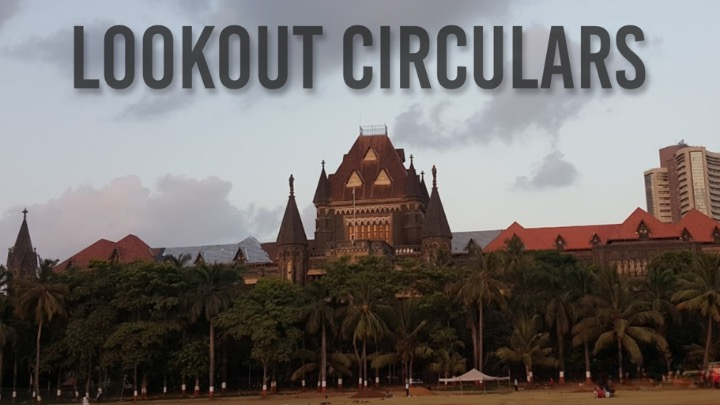
- 01 May 2024
Why is it in the News?
The Bombay High Court has held that public sector banks (PSBs) cannot recommend or request the issuance of Look Out Circulars (LOCs) against loan defaulters and has set aside the provisions of the central government’s Office Memoranda (OM) that empowered PSBs to do so.
What are Look Out Circulars (LOCs)?
- Look Out Circulars (LOCs) is a governmental directive to immigration authorities, instructing them to regulate and restrict the physical movement of individuals.
- Law enforcement agencies utilize them to prevent individuals wanted by the police or under suspicion from leaving or entering the country through designated ports of entry, including land, air, and sea ports.
- Typically issued by police, intelligence agencies, or other authorized government bodies under the Ministry of Home Affairs (MHA), LOCs are not explicitly backed by legislation but are governed by executive directives, such as the Office Memorandum issued by the MHA in 2021.
- This memorandum outlines consolidated guidelines for opening LOCs against both Indian citizens and foreigners.
- The guidelines dictate that LOCs can only be opened in criminal or penal cases, with the reason for the circular clearly indicated.
- However, in exceptional circumstances, LOCs may be issued for reasons detrimental to the sovereignty, security, or integrity of India, bilateral relations with other states, or the strategic and economic interests of India.
- Basic details, including name, parentage, passport number, and date of birth, must be available before issuing an LOC, and the process requires constant monitoring to minimize inconvenience to genuine travellers.
- Additionally, agencies responsible for requesting LOCs must review their requests quarterly and annually, with the results reported to the MHA.
- While the legal consequences of issuing an LOC lie with the originating agency, the power to issue such directives is derived from The Passports Act, 1967, which governs the grant of passports, travel documents, and endorsements to travellers during emigration or immigration processes.
'Egg Shell Skull' Rule
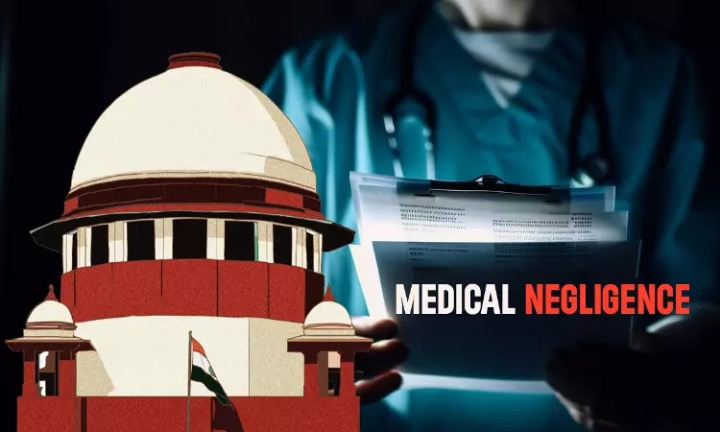
- 30 Apr 2024
Why is it in the News?
Underlining that the state and central consumer courts incorrectly applied the ‘eggshell skull’ legal principle, the Supreme Court recently restored the compensation of Rs 5 lakhs awarded by the district consumer forum in a medical negligence case.
What is the ‘Eggshell Skull’ Rule?
- The eggshell skull rule is a common law principle applied in civil litigation.
- Essentially, when the offender would be liable for all injuries that might be intensified due to the peculiar conditions of the injured person that the offender might not have known.
- Simply put, the defendant would be held responsible for injuries caused to a person when he hit him on the head, even if the victim had a particularly delicate skull or an ‘eggshell’ for a skull.
- A person who has an eggshell skull would be more severely impacted by an act, which an otherwise “normal person” would be able to withstand.
- The rule is applied for claiming an enhanced compensation, for damage that is more than what could have been ordinarily anticipated to be caused by the defendant.
Origin of the ‘Eggshell Skull’ Rule:
- The 'eggshell skull' rule, also known as the 'thin skull rule,' is a legal doctrine that holds a defendant liable for all consequences resulting from their negligent or intentional actions, even if the victim's pre-existing vulnerability worsens the outcome.
- The rule's origins can be traced back to an 1891 US case, Vosburg v. Putney, in which a boy kicked another's shin without knowing about his prior injury, leading to complications.
- The Wisconsin Supreme Court held that the defendant was responsible for the subsequent harm, even though he did not intend to cause such severe damage.
- A similar case in England a decade later involved a pregnant woman who experienced severe shock and gave birth to a disabled child after a horse van was negligently driven into a public house where she worked.
- The King's Bench upheld the principle that defendants are liable for the harm caused to victims, regardless of pre-existing vulnerabilities.
- The eggshell skull rule has been applied in various legal cases across different jurisdictions, emphasizing that defendants are accountable for the consequences of their actions, even when victims' unique vulnerabilities contribute to more significant harm.
What was the Jyoti Devi Medical Negligence Case?
- In 2005, Jyoti Devi underwent an appendix removal surgery in Himachal Pradesh, India.
- However, her abdominal pain persisted, leading to a four-year ordeal and multiple hospital visits.
- Eventually, doctors discovered that a 2.5 cm needle had been left in her abdomen during the initial surgery, requiring another operation to remove it.
- Jyoti sought compensation for medical negligence and was initially awarded Rs 5 lakhs by the district consumer forum.
- The hospital appealed, leading to the state consumer forum reducing the compensation to Rs. 1 lakh, and the National Consumer Disputes Redressal Commission (NCDRC) increasing it to Rs. 2 lakhs.
What did the SC Rule?
- The Supreme Court (SC) restored the original Rs 5 lakh compensation, criticizing the lower compensation amounts as "paltry" and "unjust."
- The SC ruled that the 'eggshell skull' rule did not apply in Jyoti's case since there was no evidence of a pre-existing vulnerability or medical condition that contributed to her suffering.
- The court cited two factors for increasing the compensation: Jyoti's prolonged pain over five years and the decade-long legal battle she endured.
Global Leaders Group on Antimicrobial Resistance
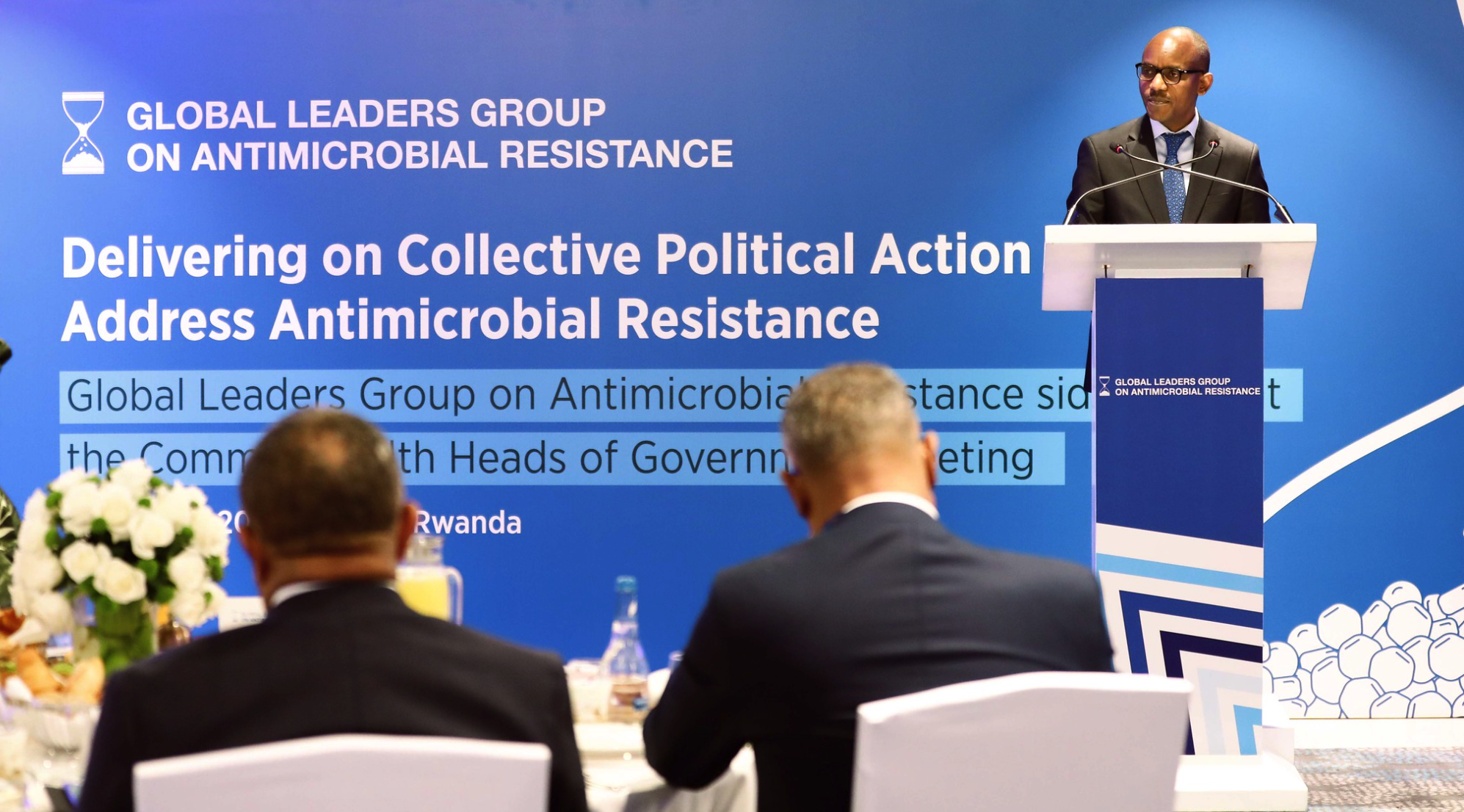
- 30 Apr 2024
Why is it in the News?
The European Society for Clinical Microbiology and Infectious Diseases (ESCMID) and the Global Leaders Group (GLG) on AMR jointly organized a high-level event, ‘Forging partnerships between science and policy’, on April 26, 2024, in Barcelona, Spain.
About Global Leaders Group on Antimicrobial Resistance:
- Established in November 2020, the Global Leaders Group on Antimicrobial Resistance is a collaborative effort of world leaders and experts from various sectors working together to accelerate political action against antimicrobial resistance (AMR).
- The Group serves as an independent global advisory and advocacy entity, striving to maintain public support, political momentum, and visibility of AMR on the global health and development agenda.
- Background: The Group emerged from a recommendation by the Interagency Coordination Group on Antimicrobial Resistance, aiming to strengthen global leadership and political action against AMR.
- The first meeting of the Group was held in January 2021.
Secretariat Support:
- The Quadripartite Joint Secretariat (QJS) on Antimicrobial Resistance, a joint effort by the Food and Agriculture Organization of the United Nations (FAO), the United Nations Environment Programme (UNEP), the World Health Organization (WHO), and the World Organisation for Animal Health (WOAH), provides secretariat support for the Group.
- Through its collaborative and multisectoral approach, the Global Leaders Group on Antimicrobial Resistance is committed to addressing the growing threat of AMR and promoting responsible and sustainable access to antimicrobials.
What is antimicrobial resistance (AMR)?
- Antimicrobial resistance (AMR) refers to the ability of microorganisms, such as bacteria, viruses, fungi, and parasites, to develop resistance to the effects of antimicrobial drugs, such as antibiotics, antivirals, antifungals, and antiparasitics.
- As a result, the medications become less effective or even ineffective at treating infections caused by these resistant microorganisms.
- AMR occurs when microorganisms undergo genetic changes that enable them to survive exposure to antimicrobial drugs.
- These changes can be shared between different microorganisms, leading to the spread of resistance genes.
- Over time, the increased use and misuse of antimicrobial drugs have accelerated the development of AMR.
Common factors contributing to AMR include:
-
- Overprescription of antimicrobials
- Non-adherence to prescribed treatment regimens
- Misuse of antimicrobials in agriculture and livestock farming
- Poor sanitation and hygiene practices
- Lack of access to clean water
- The rise of AMR poses a significant threat to public health, as it makes the treatment of common infections more difficult and increases the risk of complications.
- Additionally, AMR has implications for global health security, as resistant infections can spread rapidly across regions and become a major public health challenge.
Taam Ja' Blue Hole
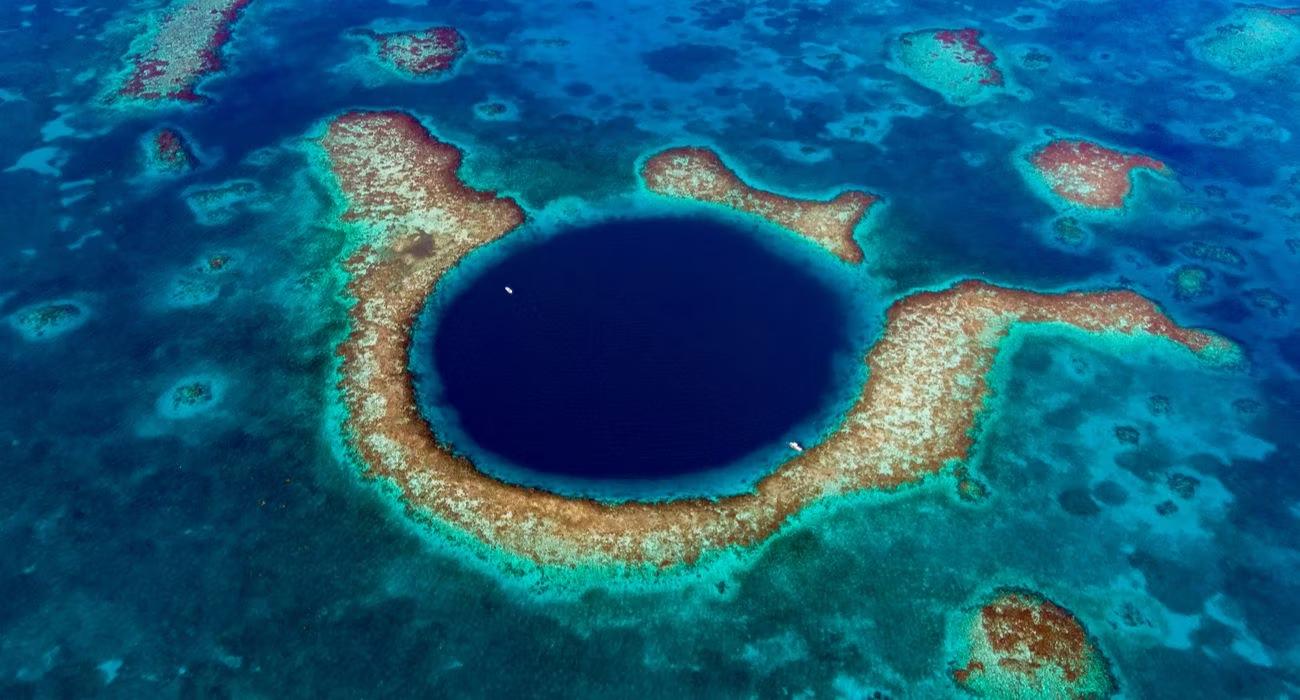
- 30 Apr 2024
Why is it in the News?
Recently, scientists have uncovered a massive sinkhole off the coast of the Yucatan Peninsula in Mexico.
What is Taam Ja' Blue Hole?
- Taam Ja' Blue Hole is the world's deepest known underwater sinkhole, recently discovered in Chetumal Bay off Mexico's Yucatan Peninsula.
- The blue hole extends approximately 420 meters (1,380 feet) below sea level, making it significantly deeper than the previous record holder, the Dragon Hole in the South China Sea.
- The nearly circular sinkhole covers an area of around 13,660 square meters and features steep sides covered in biofilms, sediments, limestone, and gypsum ledges.
- Named "Taam Ja'," meaning "deep water" in the Mayan language, the blue hole was initially discovered by a local diver in 2003 but only recently gained scientific attention.
- Further research is ongoing to explore the unique marine life and geological features within this remarkable underwater cavern.
What is a Blue Hole?
- A blue hole is a large, underwater sinkhole or cavern with a submerged opening that appears dark blue from above due to the depth and clarity of the water.
- The name "blue hole" originates from the striking contrast between the dark blue, deep water within the hole and the lighter blue shallower water surrounding it.
- These unique geological formations are typically formed through a combination of erosion and dissolution of limestone bedrock, resulting in circular or ovular depressions in the seafloor.
- Over time, blue holes can develop distinct ecosystems hosting a variety of marine life, including unique and rare species that have adapted to the specific conditions within these habitats.
- Blue holes can be found in various parts of the world, both in oceanic and inland settings.
- Some famous examples include the Great Blue Hole in Belize, the Dean's Blue Hole in the Bahamas, and the Taam Ja' Blue Hole in Mexico.
Thrombosis with Thrombocytopenia Syndrome (TTS)
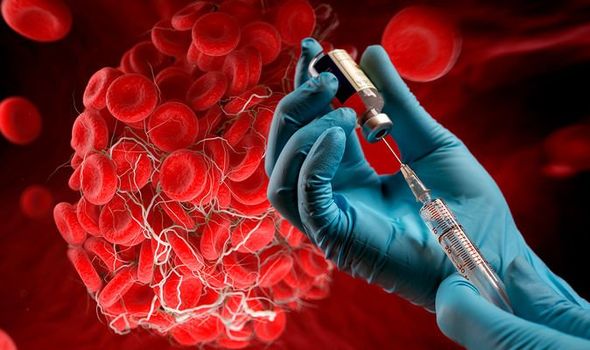
- 30 Apr 2024
Why is it in the News?
Global pharmaceutical giant AstraZeneca has said that its AZD1222 vaccine against Covid-19, which was made under license in India as Covishield, could cause low platelet counts and formation of blood clots in “very rare” cases.
What is Thrombosis with Thrombocytopenia Syndrome (TTS)?
- Thrombosis with Thrombocytopenia Syndrome (TTS) is characterised by thrombosis formation (blood clots) combined with thrombocytopenia (low platelet count) with symptoms typically presenting in the 4-42 days after vaccination.
- Platelets are small cells that help blood to clot, so having too few of them can be dangerous.
- It often involves unusual blood clot locations, such as in the brain (cerebral venous sinus thrombosis) or abdomen.
- The condition was observed in people who received adenoviral vector COVID-19 vaccines, such as Vaxzevria, Covishield (AstraZeneca), and the Johnson & Johnson/Janssen COVID-19 vaccine.
- TTS seems to occur because the body's immune system reacts to the vaccine by making antibodies that attack a protein involved in blood clotting.
- According to the Centers for Disease Control (CDC), TTS is classified into 2 tiers based on the location of thrombosis and severity of symptoms.
Tier 1:
- Rare blood clots, like in the brain or gut, sometimes alongside more typical ones in the legs or lungs.
- Low platelet count (below 150,000 per microliter).
- Positive anti-PF4 ELISA tests can help confirm diagnosis but aren't always needed.
- Tier 1 cases are usually more severe and riskier.
- This is more common in younger people.
Tier 2:
- Common blood clots, like in the legs or lungs.
- Low platelet count (below 150,000 per microliter).
- A positive anti-PF4 ELISA test is necessary for diagnosis.
Symptoms of TTS:
- Symptoms of TTS can include severe headaches, stomach pain, swelling in the legs, trouble breathing, and problems with thinking or seizures.
Great Rift Valley
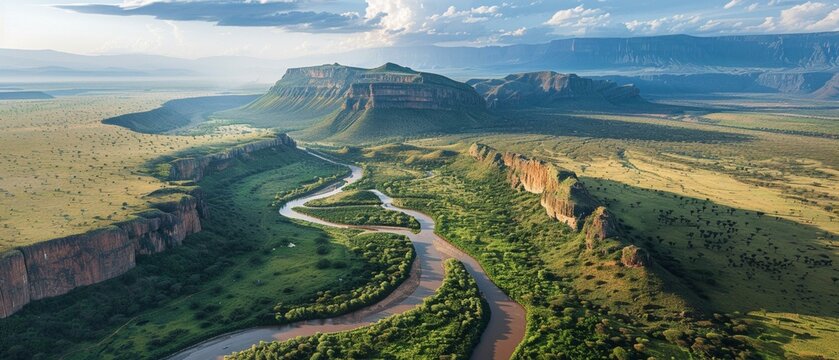
- 30 Apr 2024
Why is it in the News?
A dam burst near a village in the Rift Valley region of southern Kenya in the early hours of April 29, 2024. Some 45 people have been killed according to the police chief of Nakuru County, where the incident took place.
About the Great Rift Valley:
- The Great Rift Valley, part of the larger East African Rift System (EARS), is a significant geological feature extending across East Africa, from Jordan in southwestern Asia to central Mozambique's coast along the Indian Ocean.
- Running through numerous countries including Eritrea, Djibouti, Ethiopia, Kenya, Tanzania, Uganda, Rwanda, Burundi, the Democratic Republic of Congo, Malawi, Zambia, and Mozambique, the valley is one of Earth's most expansive rifts.
Formation:
- Resulting from tectonic plate movements about 40 million years ago, the Great Rift Valley's formation is linked to the East African Rift's emergence.
- Geologically active, the region experiences frequent earthquakes, volcanoes, hot springs, and geysers.
Notable Features:
- A series of approximately 30 lakes dot the Great Rift Valley, including Lake Tanganyika (the world's second-deepest lake) and Lake Victoria (the second-largest freshwater lake by surface area).
- Many of Africa's highest mountains, such as Mount Kilimanjaro, Mount Kenya, and Mount Margherita, form part of ranges fronting the valley.
What is a Rift Valley?
- A rift valley is a lowland region that forms where the Earth's tectonic plates move apart or rift.
- Rift valleys are a result of the tectonic processes that shape the Earth's surface, specifically in regions where tectonic plates are diverging or pulling away from each other.
- Rift valleys are characterized by a long, narrow depression, often with steep sides, running along the length of the rift.
- The depression is caused by the sinking of the ground between the two diverging plates as they pull away from each other.
- The thinning of the Earth's crust leads to subsidence and the formation of a valley.
- Rift valleys can be found on land as well as on the ocean floor.
Some notable examples of rift valleys include:
- The Great Rift Valley in East Africa is part of the larger East African Rift System.
- The Red Sea Rift separates the African and Arabian tectonic plates.
- The Rhine Valley in Europe was formed by the divergence of the European and African plates.
- Rift valleys are geologically active areas often associated with volcanic activity, earthquakes, and the formation of hot springs, geysers, and other hydrothermal features.
Global Alliance of National Human Rights Institutions (GANHRI)
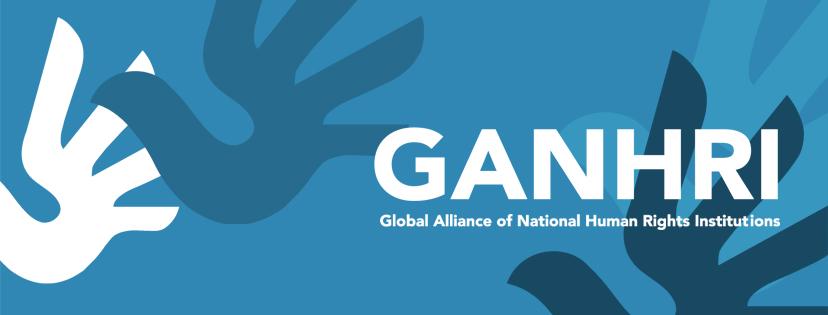
- 29 Apr 2024
Why is it in the News?
The National Human Rights Commission (NHRC) is preparing to defend the government’s human rights processes at a meeting in Geneva this week, where a decision on whether India’s human rights body will retain its “A status” is expected to be made.
About Global Alliance of National Human Rights Institutions (GANHRI):
- The Global Alliance of National Human Rights Institutions (GANHRI) is a representative body of National Human Rights Institutions (NHRIs) from across the world.
- It assists in the establishment and strengthening of independent and effective NHRIs, which meet the international standards set out in the Paris Principles.
- GANHRI encourages joint activities and cooperation among NHRIs, organises international conferences, liaises with the United Nations and other international organisations, assists NHRIs under threat, and assists governments in establishing NHRIs.
- The Asia Pacific Forum of National Human Rights Institutions (APF) and other member institutions continue to make a significant contribution to the operations and human rights initiatives of GANHRI.
- The organisation is incorporated as a non-profit organisation under Swiss law.
- Its Statute, adopted in March 2009, sets out its objectives and how it operates.
Membership:
- NHRIs that comply fully with the Paris Principles – and which have been granted 'A status' by GANHRI – are eligible to become voting members of GANHRI and to hold governance positions.
- NHRIs that only partially comply with the Paris Principles – and which have been granted 'B status' by GANHRI – can participate in meetings of GANHRI but are not eligible to vote or to hold governance positions.
Bureau:
- The operations of GANHRI are managed by its Bureau, which is comprised of representatives from each of the four regional groupings:
- Africa, the Americas, Europe, and the Asia Pacific.
- Each regional grouping is represented by elected representatives from four 'A status' NHRIs.
- The APF is currently represented on the GANHRI Bureau by Australia, India, Korea, and Qatar.
- A key role of the Bureau is to assess applications for membership in the ICC.
- It also reviews and determines the accreditation status of NHRIs, following a recommendation from the Sub-Committee on Accreditation.
- In addition, the Bureau collaborates with the Office of the High Commissioner for Human Rights (OHCHR), in particular the National Institutions and Regional Mechanisms Unit, to facilitate the participation of NHRIs in the United Nations Human Rights Council.
- Bureau meetings are usually held twice a year; the first is in conjunction with the first quarter session of the UN Human Rights Council and the second is in conjunction with one of the NHRI regional network's meetings.
- A meeting is also held in conjunction with the bi-annual International Conference.
International Conference:
- The International Conference involves NHRIs, as well as representatives of United Nations agencies, international organisations, and civil society.
- The purpose of the International Conference is to strengthen cooperation between NHRIs, to discuss human rights issues of shared concern, and to ensure follow-up at the national level.
- The International Conference is held every two years, alternating between Europe, the Americas, Africa, and the Asia Pacific.
Officials:
- The positions of GANHRI Chairperson and Secretary are served on a rotational basis by representatives nominated by the four regional coordinating committees: Europe, Africa, the Americas, and the Asia Pacific.
- The current GANHRI Chairperson is Maryam Abdullah Al Attiyah, Chairperson of the National Human Rights Committee of Qatar (NHRC), representing the Asia Pacific region.
- The current GANHRI Secretary is Amina Bouayach, Chairperson of the National Human Rights Council of Morocco (CNDH), representing the African region.
Secretariat:
- The National Institutions and Regional Mechanisms Unit of OHCHR acts as the GANHRI secretariat.
- GANHRI has a permanent representative in Geneva to support and facilitate the participation of NHRIs in the UN Human Rights Council and its human rights mechanisms.
Critical Minerals Summit
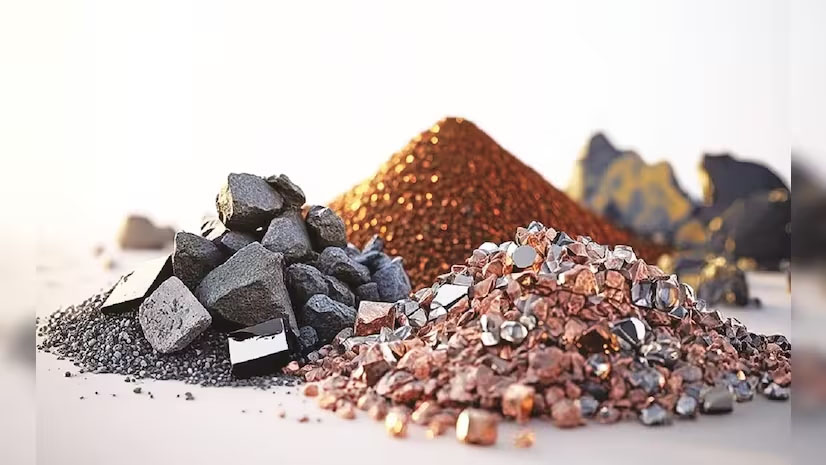
- 29 Apr 2024
Why is it in the News?
Ministry of Mines today organized a summit to foster collaboration, share knowledge, and drive innovation in the field of critical mineral beneficiation and processing in New Delhi.
About Critical Minerals Summit:
- The Critical Minerals Summit was organized by the Ministry of Mines, Government of India, in collaboration with the Shakti Sustainable Energy Foundation (Shakti), the Council on Energy, Environment and Water (CEEW), and the Indian Institute of Sustainable Development (IISD).
- It aims to promote collaboration and innovation in critical mineral beneficiation and processing.
- This event brings together a wide range of stakeholders, including industry leaders, startups, government officials, scientists, academics, and policy experts from both India and abroad.
Key Objectives:
- Tackling Demand: The summit seeks to address the growing demand for Critical Raw Materials (CRMs) needed for renewable energy systems and electric vehicles as part of India's strategic development goals.
- Focus on Key Minerals: The Ministry of Mines has identified eight crucial minerals for focus, including Glauconite (Potash), Lithium – Rare Earth Elements (Laterite), Chromium, Platinum Group, Graphite, Tungsten, Rare Earths (RE), and vanadium-associated with Graphite.
- Diverse Participation: The summit offers a platform for a diverse group of stakeholders to collaborate, share knowledge, and drive innovation in the field of critical minerals.
What are Critical Minerals?
- Critical minerals are metallic or non-metallic elements essential for modern technologies, economies, and national security, with potentially vulnerable supply chains.
- Their 'criticality' changes over time due to shifting supply and societal needs.
- Applications: Critical minerals are vital for manufacturing advanced technologies like mobile phones, computers, semiconductors, and renewable energy systems such as electric vehicles, wind turbines, solar panels, and batteries.
- They are also used in common products like stainless steel and electronics.
- Examples of Critical Minerals are antimony, beryllium, cobalt, copper, gallium, germanium, lithium, vanadium, and more.
- Top Producers: Countries like Chile, Indonesia, Congo, China, Australia, and South Africa lead in critical mineral production.
- Critical Minerals in India: The Indian government has identified 30 critical minerals, including antimony, beryllium, cobalt, copper, gallium, graphite, hafnium, indium, lithium, molybdenum, nickel, niobium, phosphorous, potash, rare earth elements, rhenium, silicon, strontium, tantalum, tellurium, tin, titanium, tungsten, vanadium, zirconium, selenium, and cadmium.
- To meet the rising demand for critical minerals and ensure a stable supply, the Indian government is actively working on auctioning critical mineral blocks and fostering industry partnerships.
- These efforts are crucial for the country's economic development and energy transition goals.
Green Taxonomy
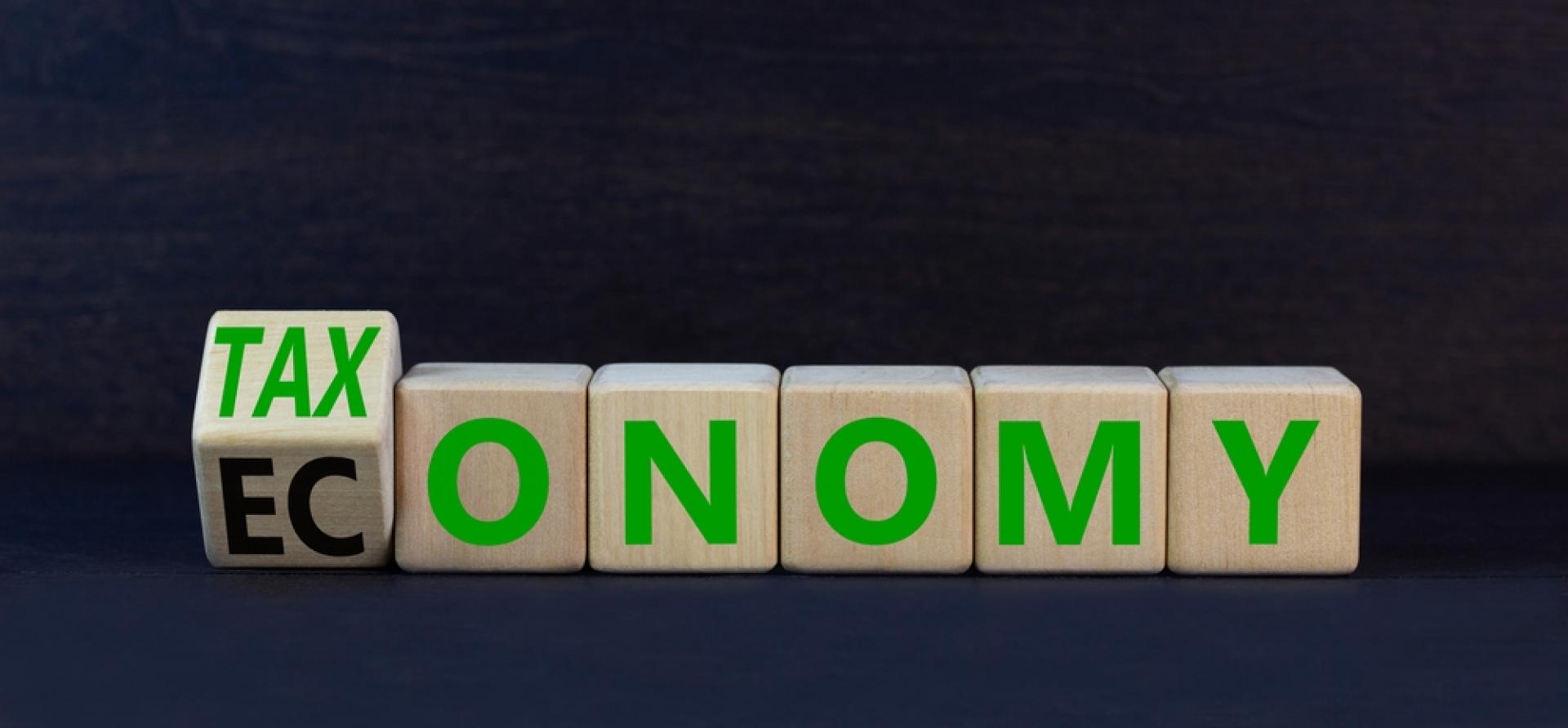
- 29 Apr 2024
Why is it in the News?
The RBI and the Finance Ministry could draw inspiration from the ASEAN region's evolving green taxonomy, continually updated with sectoral insights, to enhance sustainability efforts.
What is Green Taxonomy?
- Green taxonomy is a pivotal framework designed to delineate environmentally sustainable investments, providing clarity on which economic activities and assets qualify as "green" or environmentally sound.
- It plays a crucial role in advancing global sustainability objectives, particularly in the context of combating climate change and transitioning towards a low-carbon economy.
What is Green Taxonomy?
- At its core, green taxonomy serves as a comprehensive tool for classifying economic activities and assets based on their environmental sustainability.
- It is crafted by governments, regulators, and stakeholders with a commitment to achieving net-zero carbon emissions and fostering sustainable development.
Significance of Green Taxonomy:
- The significance of green taxonomy lies in its multifaceted role:
- Preventing Greenwashing: By establishing clear criteria and standards, green taxonomy helps prevent greenwashing, a deceptive practice wherein investments are portrayed as environmentally friendly when they may not be.
- Informing Investment Decisions: Investors are empowered to make informed decisions by utilizing the taxonomy as a guide. It offers transparency and guidance, enabling investors to align their investment strategies with environmental objectives.
- Directing Investments Towards Sustainability: The taxonomy serves as a tool for channeling investments towards sustainable economic activities and assets. By identifying and classifying green investments, it encourages the allocation of capital to projects that contribute positively to environmental goals.
Common Features of Green Taxonomies:
- Green taxonomies typically include objectives related to climate mitigation and adaptation, with some also incorporating additional environmental goals such as biodiversity conservation.
- To qualify as green, an activity must substantially contribute to at least one of these environmental objectives.
- Furthermore, green taxonomies often integrate "do no significant harm" criteria, ensuring that activities considered green do not compromise other environmental objectives.
- Additionally, they emphasize compliance with social safeguards, including human rights considerations.
Nuanced Approaches in Green Taxonomies:
- Some taxonomies adopt a nuanced approach, such as the "traffic light" system utilized by the Indonesian and proposed Singaporean taxonomies.
- Under this approach, economic activities are categorized into different tiers (green, amber, or red) based on their environmental sustainability.
- This system offers a more nuanced understanding of the environmental impact of various activities, allowing for tailored assessments and decision-making.
What Is Greenwashing?
- Greenwashing is the process of conveying a false impression or misleading information about how a company’s products are environmentally sound.
- Greenwashing involves making an unsubstantiated claim to deceive consumers into believing that a company’s products are environmentally friendly or have a greater positive environmental impact than they actually do.
- In addition, greenwashing may occur when a company attempts to emphasize sustainable aspects of a product to overshadow the company’s involvement in environmentally damaging practices.
- Performed through the use of environmental imagery, misleading labels, and hiding tradeoffs, greenwashing is a play on the term “whitewashing,” which means using false information to intentionally hide wrongdoing, error, or an unpleasant situation in an attempt to make it seem less bad than it is.
National Centre for Good Governance (NCGG)
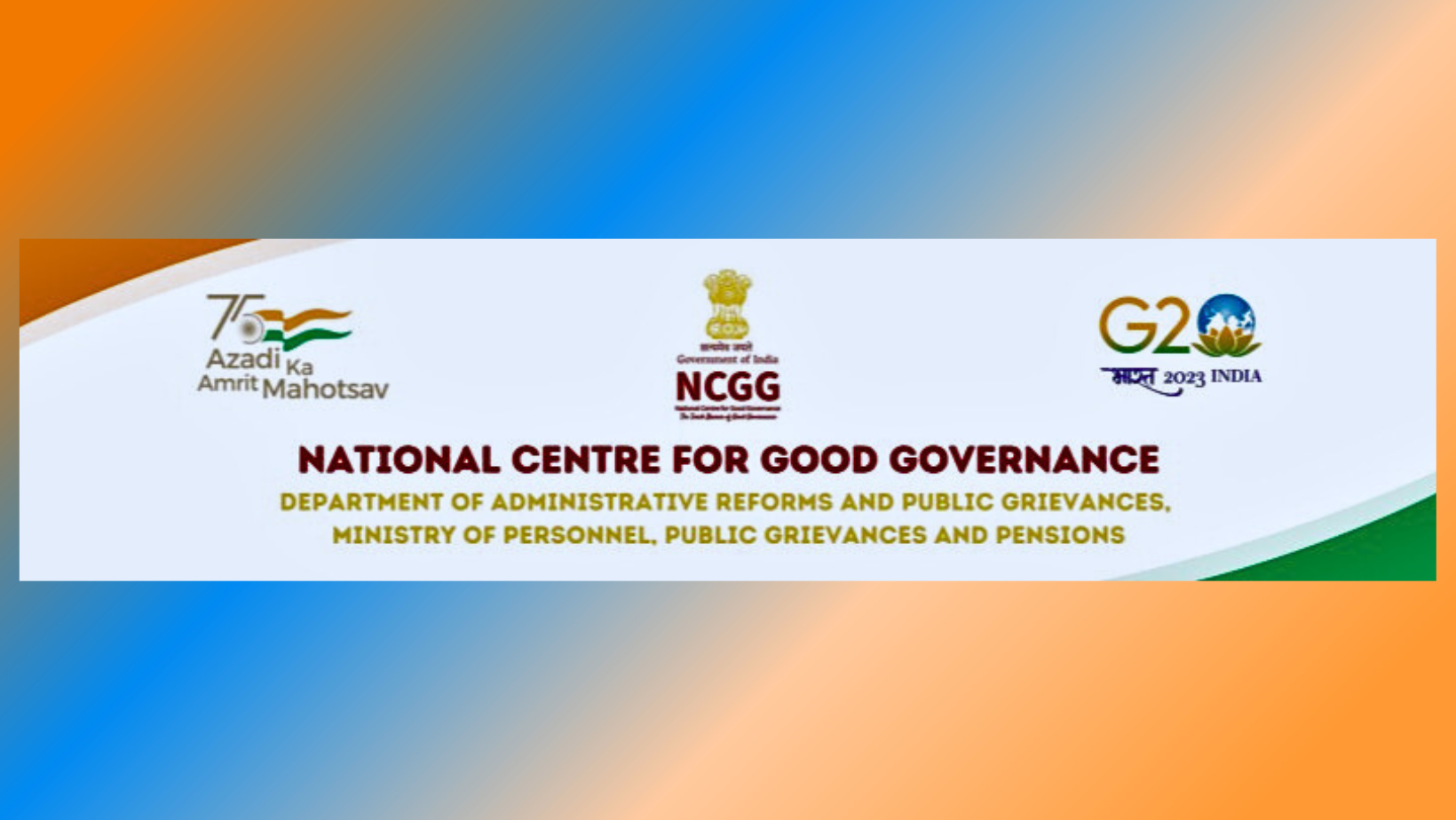
- 29 Apr 2024
Why is it in the News?
A central government delegation is on a three-day visit to Bangladesh beginning Sunday to further boost bilateral ties on governance matters, according to an official statement.
About the National Centre for Good Governance:
- The National Centre for Good Governance (NCGG) was set up in 2014 by the Government of India as an apex–level autonomous institution under the Ministry of Personnel, Public Grievances and Pensions.
- The Centre traces its origin to the National Institute of Administrative Research (NIAR), which was set up in 1995 by the Lal Bahadur Shastri National Academy of Administration (LBSNAA), the Government of India's topmost training institute for civil services.
- NIAR was subsequently rechristened and subsumed into NCGG.
- NCGG deals with a gamut of governance issues from local, state to national levels, across all sectors.
- The Centre is mandated to work in the areas of governance, policy reforms, capacity building, and training of civil servants and technocrats of India and other developing countries.
- It also works as a think tank.
- Since its inception, the Centre has been extensively working in areas such as primary and elementary education, decentralized planning at district and block levels, capacity building of Panchayat Raj Institutions (PRIs), participatory models of learning and action, rural development, cooperatives, and public sector management, etc.
- In addition, it focuses on issues related to good governance, social accountability, water, sanitation, and hygiene (WASH), among other sectors.
- The Centre encapsulates the essence of good governance and weighs on the importance of the rule of law, bringing in transparency, working to promote public participation in governance, service delivery, and reforms, as well as in developing accountable institutions, access to information, etc.
Raja Ravi Varma
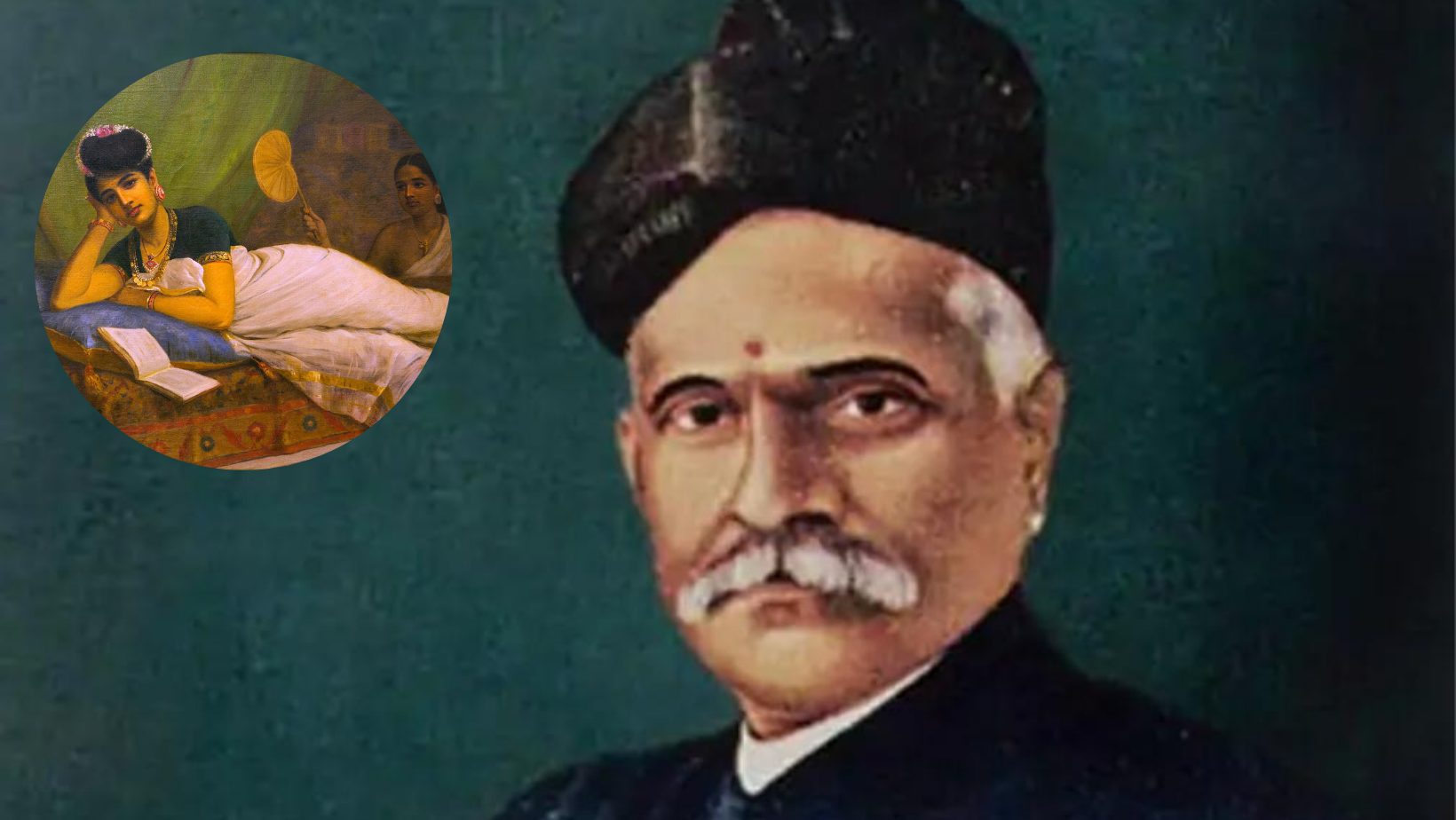
- 29 Apr 2024
Why is it in the News?
The first true copy of the painting Indulekha by legendary artist Raja Ravi Varma will be unveiled at the Kilimanoor Palace, where the eminent artist was born in 1848, on the occasion of his 176th birth anniversary celebrations.
Who was Raja Ravi Varma?
- Raja Ravi Varma was an Indian painter and artist.
- He is considered among the greatest painters in the history of Indian art.
- His works are one of the best examples of the fusion of European academic art with a purely Indian sensibility and iconography.
- Additionally, he was notable for making affordable lithographs of his paintings available to the public, which greatly enhanced his reach and influence as a painter and public figure.
- His lithographs increased the involvement of common people with fine arts and defined artistic tastes among common people.
- He was part of the royal family of erstwhile Parappanad, Malappuram district.
- He is also celebrated for inventing the first oleograph press in Ghatkopar, Mumbai.
- His paintings depicting Hindu gods and goddesses had a significant influence on their portrayal in art and cinema for many years.
- His artworks found popularity not only among Europeans but also among laymen, who appreciated his work for its simplicity.
- In a time when lower castes were barred from temples, they found solace in Varma's work.
- In addition to Indian mythology, he was admired for highlighting the beauty of South Indian women.
- Viceroy Lord Curzon honored him with the 'Kaisar-i-Hind' Gold Medal for his service.
- His paintings can be broadly classified into three categories: portraits, portrait-based compositions, and theatrical compositions based on myths and legends.
- Some of his popular paintings include 'A Family of Beggars,' 'A Lady Playing Swarbat,' 'Draupadi Dreading to Meet Kichaka,' 'Girl in Sage Kanwa's Hermitage (Rishi-Kanya),' 'Jatayu,' and 'Indulekha' among others.
About Indulekha Painting:
- The painting by Raja Ravi Varma draws inspiration from the novel as he creates an oil painting of Indulekha, who is depicted holding a letter addressed to her lover, Madhavan, the hero of the novel, with the salutation 'Dear Madhavan...' dated 1892.
- The painting, characterized by an over-the-top sense of symmetry and precise attention to micro-details, dates back to the 19th century.
- Another belief suggests that the famous painting 'Reclining Lady' by Ravi Varma was modeled on Indulekha.
- Recently, the painting was restored by Madhan S. of the Heritage Conservation and Research Academy.
Expanding Glacial Lakes in the Indian Himalayas: ISRO
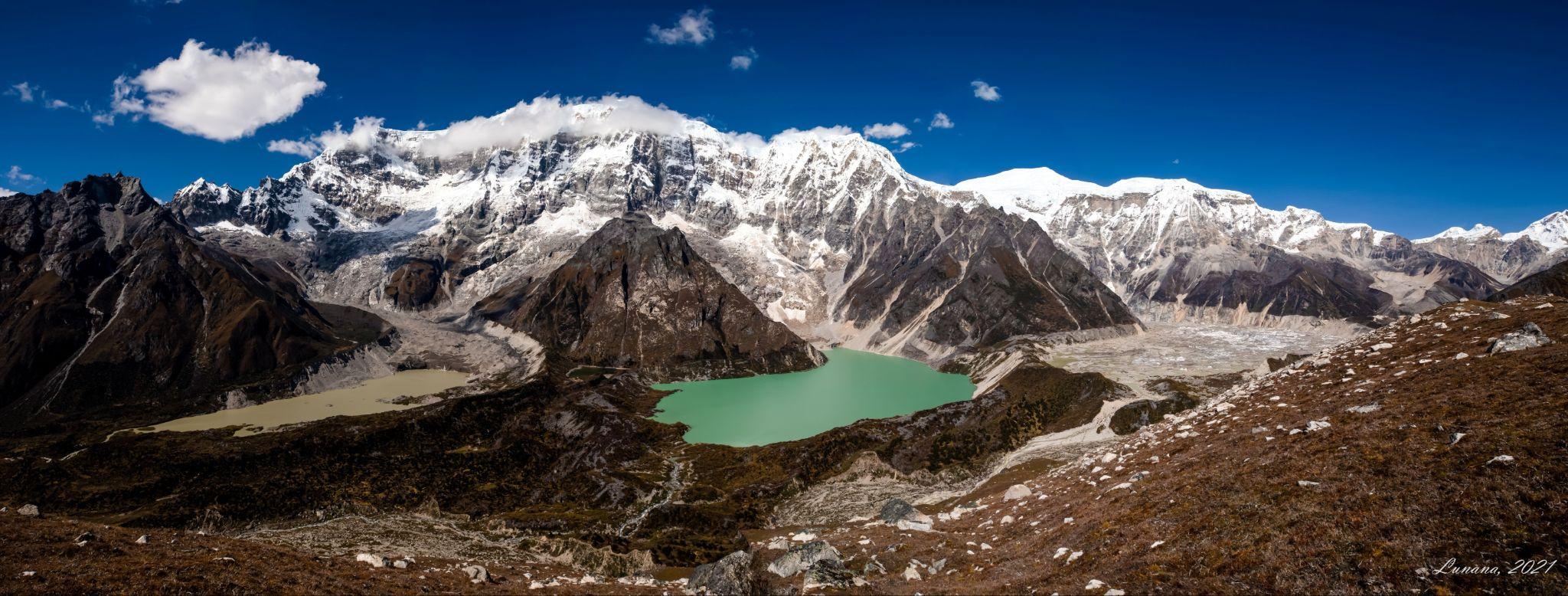
- 27 Apr 2024
Why is it in the News?
Experts express concern over the ISRO analysis findings, indicating that the expansion of glacial lakes due to warming could result in cascading impacts in lower regions.
Highlights of the ISRO Report:
- The ISRO report said 601 glacial lakes, or 89 percent, have expanded more than twice, and 10 lakes have grown between 15 times and double their size. Sixty-five lakes have expanded 1.5 times.
- Of the 2,431 glacial lakes larger than 10 hectares, 676 have significantly expanded, and at least 130 of these lakes are in India 65 (Indus River basin), 7 (Ganga River basin), and 58 (Brahmaputra River basin).
- Elevation-based analysis shows 314 lakes are located in the 4,000 to 5,000 meters range, and 296 lakes are above 5,000 meters elevation.
What are Glacial Lakes?
- Glacial lakes emerge in hollows or basins shaped by glaciers' erosive force and are prevalent in areas where glaciers once existed or persist.
- They vary widely in size and shape, from tiny pools to expansive bodies of water.
- ISRO classifies them into four main types: moraine-dammed, ice-dammed, erosion-based, and 'others'.
- While vital as freshwater sources for rivers, glacial lakes also pose risks, particularly Glacial Lake Outburst Floods (GLOFs).
- GLOFs occur when these lakes discharge large volumes of meltwater, often due to natural dam failures, causing sudden and severe downstream flooding.
Formation Processes:
- Glacial Erosion: Glaciers, moving slowly, sculpt the landscape by eroding bedrock through abrasion and plucking, creating valleys and basins.
- Moraine Deposition: As glaciers move, they transport sediment, depositing it at their edges as moraines, which can act as natural dams, forming lake basins.
- Ice Melting: Rising temperatures or glacier retreat causes ice to melt, filling depressions created by erosion with water, and forming glacial lakes.
- Terminal Moraine Formation: Glaciers may leave behind ridges of sediment at their terminus, creating natural dams that trap water, forming terminal moraine lakes.
Utilization of Remote Sensing for Glacial Lake Monitoring:
- Monitoring glacial lakes in the Himalayan region presents challenges due to rugged terrain, making satellite remote-sensing technology indispensable.
- By analyzing satellite data, changes in glacial lakes can be tracked over time, offering insights into their evolving dynamics.
- This data is vital for understanding their environmental impact and devising strategies to manage risks such as glacial lake outburst floods (GLOFs) and adapt to climate change in glacier-influenced regions.
Mitigating Risks Associated with Glacial Lakes:
- Research suggests that reducing glacial lake levels by 10 to 30 meters can significantly alleviate downstream impacts, albeit not eliminate GLOF risks.
- One effective method involves siphoning off lake water using extended High-Density Polyethylene (HDPE) pipes.
- In 2016, the Sikkim State Disaster Management Authority successfully employed this technique to lower water levels in South Lhonak Lake, showcasing its practicality and efficacy in risk reduction efforts.
Haritha Karma Sena (HKS)
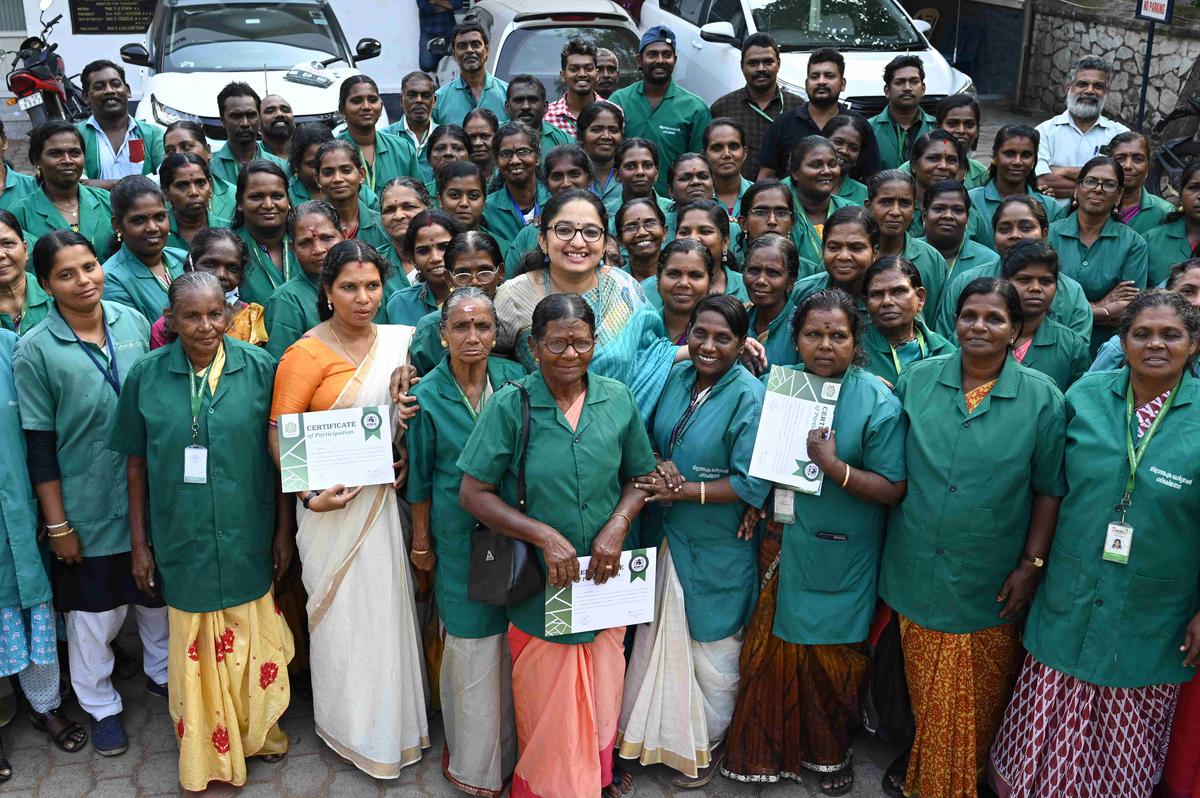
- 27 Apr 2024
Why is it in the News?
Adhering to green protocol, the Haritha Karma Sena workers have to ensure that the polling booths and surroundings are free of plastic and other waste materials in Kerala.
What is Haritha Karma Sena (HKS)?
- Haritha Karma Sena (HKS) is a professional team comprising Green Technicians and Green Supervisors, predominantly composed of Kudumbashree Women.
- Their duties include collecting, transporting, processing, recycling/disposing, and managing waste materials in collaboration with respective Local Self-Governments.
- Launched in 2013 by the Government of Kerala, it is part of the Haritha Keralam Mission.
What is the Haritha Keralam Mission?
- It is a comprehensive initiative aimed at transforming Kerala into a clean and green state.
- The mission strives to eliminate garbage, promote sustainable waste management practices, generate employment in the waste management sector, and raise environmental awareness.
What is the Success Story of the HKS?
- The 35,500 members of the HKS have tirelessly worked to change societal attitudes towards household waste management.
- Waste collection and segregation have become respected and remunerative occupations.
- The transition from centralized waste treatment to decentralized management reflects a community-driven approach to sustainability.
- Kudumbashree's empowerment of women and the government's emphasis on awareness and training are crucial for sustaining these efforts.
What More Needs to be Done?
- Future plans include improving segregation methods, promoting diversification, and expanding waste storage infrastructure.
- These initiatives reflect a holistic approach to waste management and economic development.
Symbol Loading Units (SLUs)
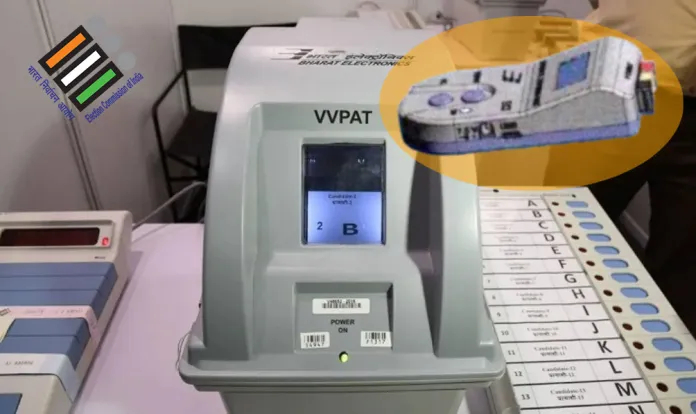
- 27 Apr 2024
Why is it in the News?
Recently, the Supreme Court rejected the plea for full verification of VVPAT slips against EVM counts and directed the ECI to seal the Symbol Loading Unit (SLU) for 45 days post-election results announcement.
What is a Symbol Loading Unit (SLU) and How Does it Work?
- Symbol Loading Units (SLUs) were introduced around the same time as VVPATs, a little over a decade ago.
- VVPATs help voters verify their votes, they see a slip with a printed image of the party symbol they voted for.
- But for the VVPAT to print a symbol correctly, information pertaining to the list of candidates and their symbols must be loaded onto the VVPAT machine in the correct order.
- This is where the Symbol Loading Unit, or SLU, comes in.
- The introduction of VVPATs necessitated the use of SLUs.
- The SLU is used to load the symbols of the candidates onto the VVPAT.
- It is a matchbox-sized device that is first connected to a laptop or personal computer, from where a symbol-loading application is used to load a bitmap file containing the candidates’ names, serial numbers, and symbols.
- The SLU is then connected to the VVPAT to transfer that file onto the paper audit machine.
- This is done under the supervision of a district election officer.
At Which Point in the Election Process Are SLUs Used?
- The SLUs come into the picture only a few days before polling in a particular seat, when the EVMs are being commissioned and the list/ order of contesting candidates is decided and set on the ballot unit and the VVPAT.
- Candidate-setting can happen at any time from five to two days before voting at a seat.
- Once the SLU is used to load symbols onto the VVPAT, the EVM is ready for use.
- After this, the SLU is of no relevance to the actual voting process.
What Happens to an SLU After Symbols Are Loaded?
- Typically, a small number of SLUs are enough to load symbols onto all VVPATs for a seat.
- According to EC officials, it takes an SLU two to three minutes to load each VVPAT.
- Once the symbol-loading is complete, the SLUs are handed over to the concerned district election officer for safekeeping.
- They remain in the officer’s custody until the day after voting. Afterward, the SLUs are released to the engineers of the two EVM manufacturers, Bharat Electronics Ltd (BEL) or Electronics Corporation of India Ltd (ECIL), so they can be used to load symbols onto VVPATs for other seats in subsequent phases.
- Thus, in a multi-phase election like the ongoing one for the 18th Lok Sabha, an SLU is typically reused after one phase of polling to load symbols onto VVPATs meant for other seats in subsequent phases.
Bambi Bucket

- 27 Apr 2024
Why is it in the News?
Recently, an Indian Air Force MI 17 V5 helicopter, equipped with a Bambi Bucket, was deployed to combat the forest fires in Nainital district, Uttarakhand.
What is a Bambi Bucket?
- Bambi Bucket is a specialised aerial firefighting tool that has been in use since the 1980s.
- It is essentially a lightweight collapsible container that releases water from underneath a helicopter to targeted areas.
- The water is released by using a pilot-controlled valve.
- One of its key features is that it can be quickly and easily filled.
- The bucket can be filled from various sources, including a lake, river, pond, and swimming pool, which allows firefighters to swiftly refill it and return to the target area.
- Bambi Bucket is available in a variety of sizes and models, with capacities ranging from 270 liters to more than 9,840 liters.
How was the Bambi Bucket Invented?
- The Bambi Bucket was invented by Don Arney, a Canadian business, in 1982.
- Arney came up with the idea after he realised that the aerial firefighting water buckets in use at the time were not efficient and had a high failure rate.
- These water buckets were generally made of “solid fiberglass, plastic, or canvas with metal frames” and were “too rigid to fit inside the aircraft” and had to be “trucked to fire sites or flown in on the hook of a helicopter thereby slowing the aircraft down.
- Another issue was that the water dropped from these containers used to get dispersed into a spray thereby reducing impact.
- Bambi Bucket does not have these limitations.
- One, it can be stored within the helicopter until development.
- Two, it discharges a solid column of water, “resulting in a more accurate and effective water dump, less evaporation on the descent, and greater impact force.
- It was an instant success and began to be widely used for firefighting.
- Today, Bambi Bucket is used in more than 115 countries around the world by more than 1,000 helicopter operators.
Carnation Revolution
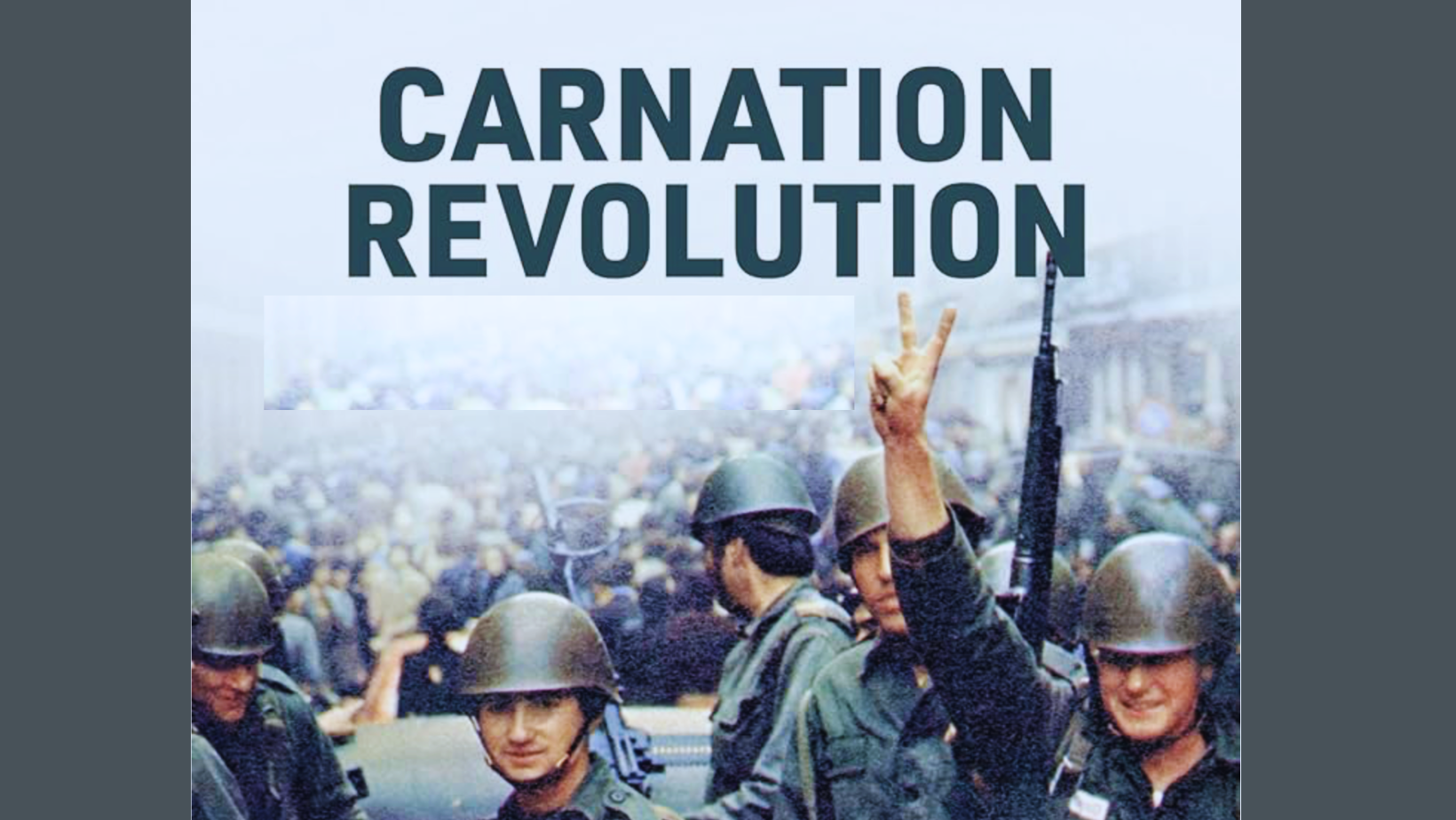
- 27 Apr 2024
Why is it in the News?
Recently, Portugal commemorated its 50th anniversary of Portugal's Carnation Revolution – the peaceful uprising that toppled a dictatorship and ended a decade of colonial war.
About the Carnation Revolution:
- The Carnation Revolution, also known as the 25th of April, was a pivotal event in Portugal's history that marked the transition from an authoritarian regime to a democratic government.
- On April 25, 1974, a group of military officers orchestrated a nearly bloodless military coup, overthrowing the Estado Novo dictatorship that had ruled Portugal for over four decades.
- The revolution aimed to accelerate decolonization, end ongoing wars through negotiations, and improve socio-economic conditions within Portugal.
- This event not only transformed Portugal's political landscape but also had significant implications for the nation's African colonies.
- Several factors contributed to the success of the Carnation Revolution, including widespread discontent with the authoritarian regime, a costly and unpopular colonial war, and the growing desire for democracy and improved living conditions.
- The coup leaders, known as the Armed Forces Movement (MFA), garnered support from various factions, including the Communist Party, socialists, and moderate democrats.
- The Carnation Revolution was named after a Lisbon flower seller who offered red carnations to soldiers, which were then placed in the barrels of their rifles.
- This iconic gesture symbolized the peaceful nature of the coup and solidified the carnation as a symbol of Portugal's democratic movement.
- The 50th anniversary of the Carnation Revolution celebrated on April 25, 2024, signifies the enduring impact of this historic event on Portugal's political trajectory and its relationship with its former colonies.
Bathymetry
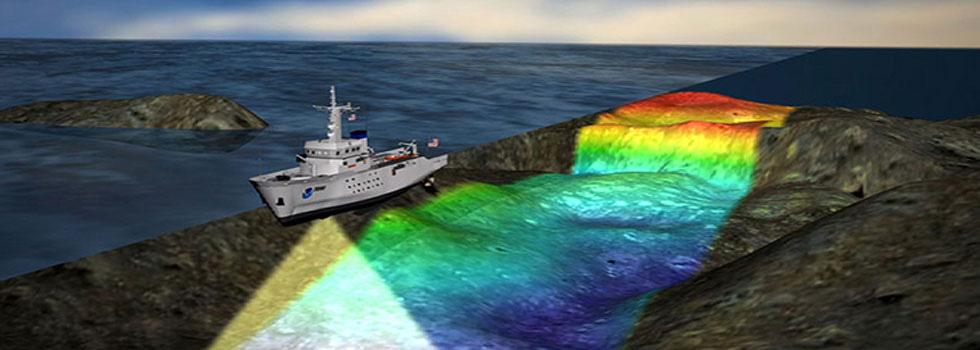
- 26 Apr 2024
Why is it in the News?
Scientists from the Indian National Centre for Ocean Information Services (INCOIS) recently conducted a study of the bathymetry, or ocean floor, in the Indian Ocean.
What is Bathymetry?
- Bathymetry is a technique dedicated to mapping the depths of water bodies, that is, it is the measurement and representation of the topography of the bottom of rivers, seas, and oceans.
- In addition to measuring depth, this study also includes identifying underwater relief and creating three-dimensional maps of the sea floor.
- The word “bathymetry” comes from the Greek "bathýs", meaning deep, and "metron", meaning measure.
- Bathymetry allows for obtaining information about the physical characteristics of the sea floor, such as seamounts, mountain ranges, valleys, abyssal plains, and underwater canyons.
How is Bathymetry Performed?
- To carry out bathymetry, specific equipment is used, such as multibeam sonar (MultiBeam Echosounder), IMU (Inertial Measurement Unit), and high-precision positioning systems (via satellite with RTK correction).
- Multibeam sonar emits sound pulses toward the sea floor and measures the time it takes for the sound to return to the sensor after being reflected by submerged surfaces.
- Based on this sound return time and knowledge of the exact position of the vessel and its attitude (roll, pitch, yaw), it is possible to calculate the depth at a given point.
- The bathymetry service generates charts, blueprints, and digital models (2D and 3D) of the sea floor.
- LiDAR sensors, on the other hand, are used to detect data through beams of light above the waterline, mapping slopes, rockfills, and channel walls.
- The fusion of bathymetry data with Lidar data allows the three-dimensional construction of the environment in very high resolution.
- Allowing the client to plan or verify works and/or assets in the region of interest.
About Indian National Centre for Ocean Information Services (INCOIS):
- Established in 1999, the Indian National Centre for Ocean Information Services (INCOIS) under the Ministry of Earth Science, Govt of India.
- It is mandated to provide ocean information and advisory services to a broad spectrum of users through sustained ocean observations and constant improvements through systematic and focused research.
- The activities include data services, consultancy, and capacity development.
- HQ: Hyderabad
- INCOIS is a permanent member of the Indian delegation to the IOC of UNESCO and a founding member of the Indian Ocean Global Ocean Observing System (IOGOOS) and the Partnership for Observing the Oceans (POGO).
Inflammatory bowel disease (IBD)
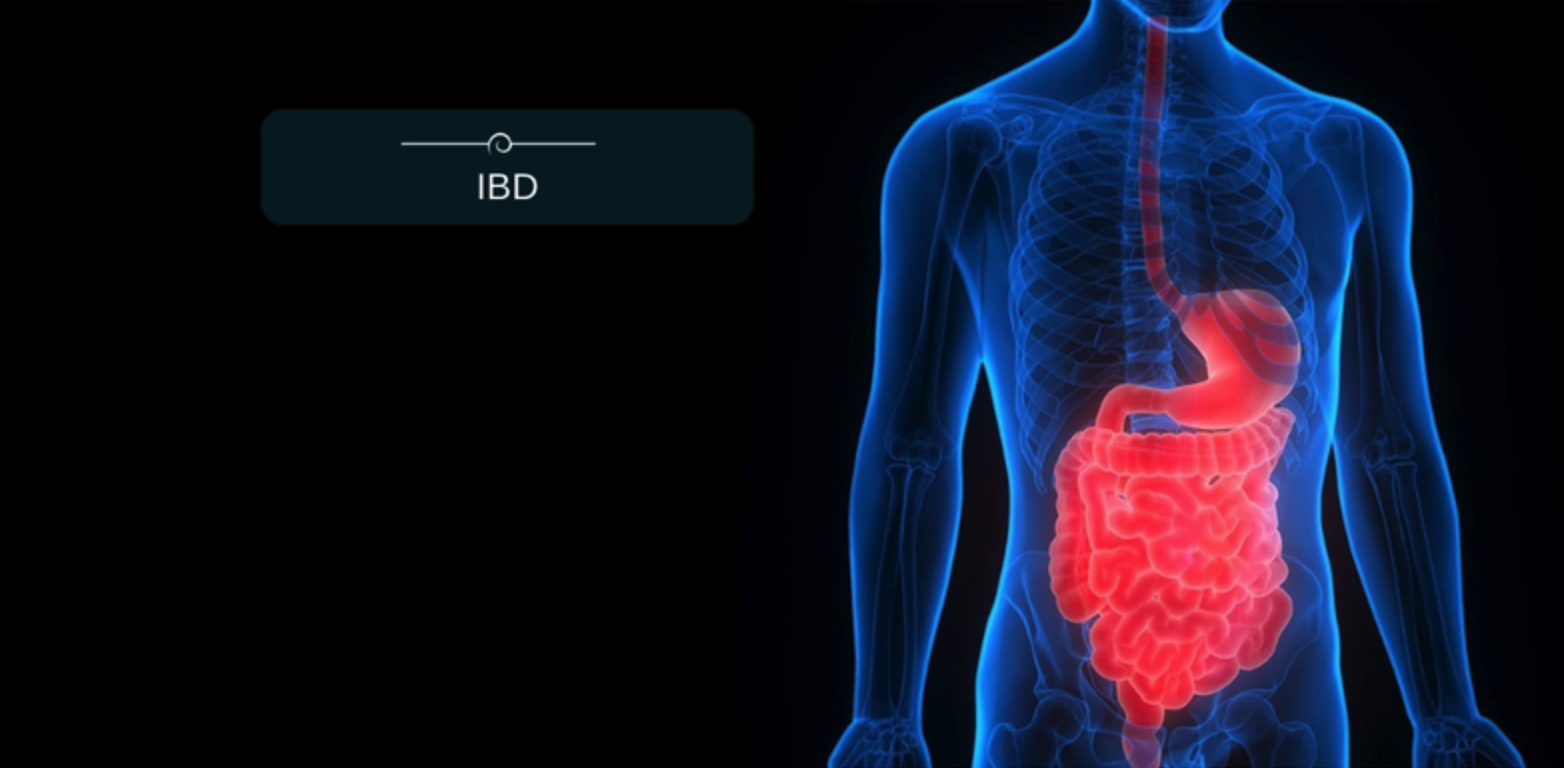
- 26 Apr 2024
Why is it in the News?
The rising incidence of Inflammatory Bowel Disease (IBD) across the globe has become a concern for doctors, while early diagnosis is lacking, diagnosis in itself is challenging considering that other conditions could mimic IBD.
What is IBD?
- Inflammatory bowel disease (IBD) is a recurring and long-term (chronic) condition that affects the digestive tract.
- IBD causes inflammation of the stomach, small intestine, and colon.
- IBD is a progressive disease that can become worse over time and cause other damage if not properly diagnosed and treated.
- There are two types of IBD: Crohn’s disease and ulcerative colitis.
- Crohn’s disease: leads to inflammation anywhere in the gastrointestinal tract, however, it commonly affects the end of the small intestine (the ileum) and the beginning of the large intestine (the right colon).
- Crohn’s disease can also affect the entire thickness or alternating areas of the bowel wall.
- Ulcerative colitis: causes inflammation in the large intestine or colon.
- This form of IBD inflames the innermost lining of the colon and creates tiny open sores (ulcers).
- Crohn’s disease: leads to inflammation anywhere in the gastrointestinal tract, however, it commonly affects the end of the small intestine (the ileum) and the beginning of the large intestine (the right colon).
What causes IBD?
- The exact cause of IBD is unknown, but IBD is the result of a weakened immune system. Possible causes are:
- The immune system responds incorrectly to environmental triggers, such as a virus or bacteria, which causes inflammation of the gastrointestinal tract.
- There also appears to be a genetic component.
- Someone with a family history of IBD is more likely to develop this inappropriate immune response.
Symptoms of IBD:
- Although Crohn's disease and ulcerative colitis are different conditions, IBD conditions have similar symptoms, such as:
- Abdominal pain
- Diarrhea
- Rectal bleeding
- Vomiting
- Weight loss
How Is Inflammatory Bowel Disease (IBD) Treated?
- While there is no curative treatment for IBD, it is managed through medication, dietary changes, and occasionally surgery.
- The treatment aims to alleviate symptoms, mitigate complications, prevent future flare-ups, and potentially promote the healing of inflamed intestines.
Indian Historical Records Commission (IHRC)
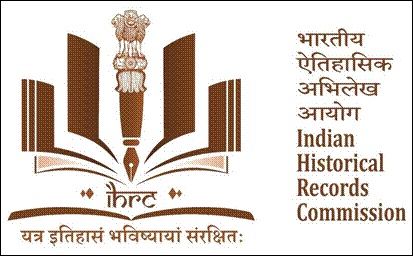
- 26 Apr 2024
Why is it in the News?
Recently, the Indian Historical Records Commission (IHRC) has adopted a new logo and motto.
About Indian Historical Records Committee (IHRC):
- The Indian Historical Records Committee (IHRC) is a national forum established in 1919, comprising creators, custodians, and users of records.
- Its primary purpose is to advise the Government of India on matters related to record management and their utilization for historical research.
Secretariat:
- The National Archives of India, New Delhi, serves as the Secretariat for the IHRC, formerly known as the Indian Historical Records Committee since 1911.
Leadership and Membership:
- Led by the Union Minister of Culture, the IHRC consists of 134 members, including government agencies, government-appointed nominees, representatives from State/UT Archives, universities, and learning institutions.
- Over the years, the IHRC has convened 62 sessions.
Committee Structure: The IHRC operates with two adjunct bodies:
- Editorial Committee: Responsible for reviewing and approving papers based on archival sources for presentation at committee sessions.
- Standing Committee: Tasked with reviewing the implementation of committee recommendations and providing input on meeting agendas.
- The Secretary of the Ministry of Culture chairs the Standing Committee of IHRC.
- The Indian Historical Records Commission (IHRC) has adopted a new logo and motto recently.
- The logo signifies the theme and uniqueness of IHRC entirely.
- The pages in the shape of lotus petals represent IHRC as the resilient nodal institution for maintaining historical records.
- The Sarnath pillar in the middle represents India's glorious past.
- Brown as the colour theme reinforces the organization's mission of preserving, studying, and honouring India's historical records.
- The motto translates as "Where history is preserved for the future."
- The IHRC plays a vital role in identifying, collecting, cataloging, and maintaining historical documents, manuscripts other sources of historical information.
- By doing so the Commission ensures that valuable historical knowledge is conserved for future generations.
- The motto, therefore, reflects the Commission's commitment to ensuring the safeguarding of historical documents and making these accessible for the benefit of present and future generations.
Nephrotic Syndrome
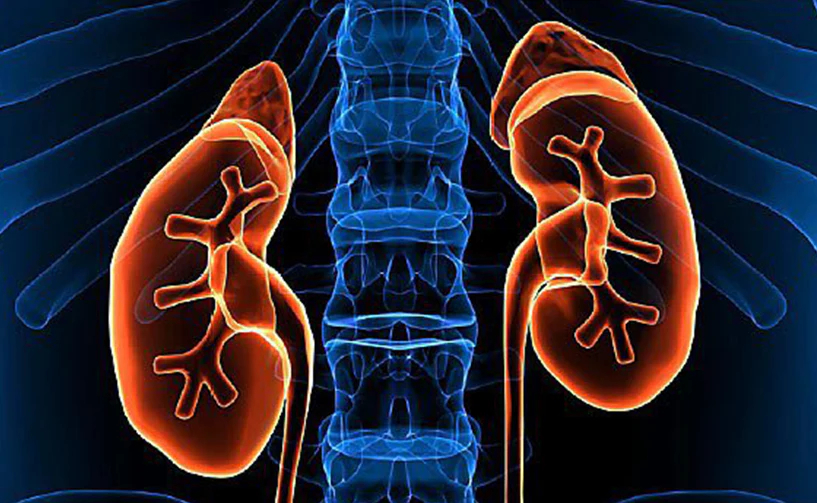
- 26 Apr 2024
Why is it in the News?
On the heels of recent news reports on how keratin-based hair-straightening products containing glycolic acid derivatives led to severe kidney injury in women, researchers from Kerala have reported a series of cases wherein, the use of fairness creams has been linked to nephrotic syndrome.
What is Nephrotic Syndrome?
- Nephrotic syndrome causes scarring or damage to the filtering part of the kidneys (glomeruli).
- This causes too much protein to be lost from the blood into the urine.
People with nephrotic syndrome often have:
-
- Low levels of protein in the blood (hypoalbuminemia)
- Very high levels of protein in the urine (proteinuria)
- Swelling (edema), especially around the eyes, feet, and hands
- High cholesterol
What causes nephrotic syndrome?
- Nephrotic syndrome results from damage to the kidneys' glomeruli.
- These are the tiny blood vessels that filter waste and excess water from the blood and send them to the bladder as urine.
- The glomeruli keep protein in the body. When they are damaged, protein leaks into the urine.
- Healthy kidneys allow less than 1 gram of protein to spill into the urine in a day.
- In nephrotic syndrome, the glomeruli let 3 grams or more of protein leak into the urine during 24 hours.
- Nephrotic syndrome may happen with other health problems, such as kidney disease caused by diabetes and immune disorders.
- It can also develop after damage from viral infections.
- The cause of nephrotic syndrome is not always known.
What are the symptoms of nephrotic syndrome?
- The symptoms of nephrotic syndrome include:
- Swelling or edema, typically in the ankles, feet, or legs
- Fatigue
- Loss of appetite
- Weight gain
- Foamy urine
Treatment:
- The treatment of nephrotic syndrome varies depending on its cause.
- However, it typically includes medications to treat the underlying cause, as well as changes in diet.
- Dietary changes that might help in treating nephrotic syndrome include Source:
- limiting sodium
- eating less protein
- reducing the intake of saturated fat and cholesterol
Complications of nephrotic syndrome:
- Serious complications of nephrotic syndrome include kidney failure or end-stage renal disease (ESRD).
- Dialysis may be needed if kidney failure develops which can happen in extreme cases.
Army Tactical Missile Systems (ATACMS)
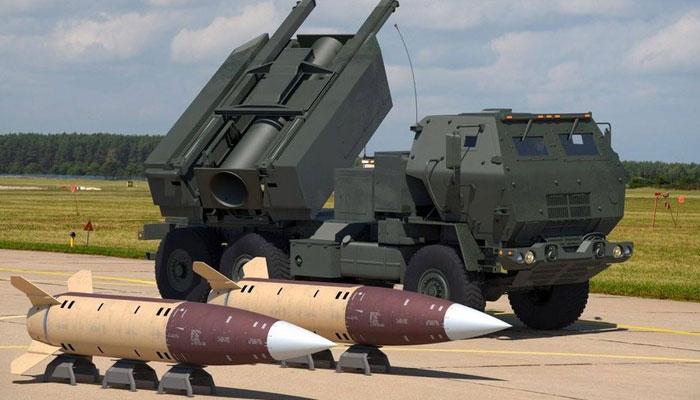
- 26 Apr 2024
Why is it in the News?
The United States has confirmed providing long-range Army Tactical Missile Systems (ATACMS) to Ukraine to aid its war effort against Russia.
What is the ATACMS System?
- The Army Tactical Missile Systems (ATACMS) is one of the most potent missile systems built by US-based arms manufacturer Lockheed Martin.
- This is a surface-to-surface artillery weapon system.
- Its biggest strengths are the long-range of attack, the ability to fire cluster munitions, and the weapon system’s mobility.
- Range: There is a mid-range version of the ATACMS, called Block 1, and a long-range version, Block 1A.
- ATACMS Block 1 has a range of 165 kilometres. Ukraine was provided these systems last year and used them to attack targets in October.
- ATACMS Block 1A, on the other hand, has a maximum range of 300 km. However, this depends on the kind of munition the missile carries.
- With such a range, the long-range ATACMS Block 1A is capable of striking targets well beyond the range of existing Army cannons, rockets, and other missiles.
- Mobility: ATACMS missiles are fired from the High Mobility Artillery Rocket System (HIMARS) and M270 Multiple Launch Rocket System (MLRS) platforms. Both of these launching systems are highly mobile automatic systems.
Why Ukraine can’t use ATACMS to Target Russian Territories?
- Despite territories deep inside Russia now being within the range of the ATACMS, Ukraine cannot use it to hit targets in these locations.
- Ukraine has committed to only use the weapons inside Ukraine, not in Russia.
- The US administration has made it clear that the weapons cannot be used to hit targets inside Russia.
- The Biden administration is concerned that if Ukraine strikes deep into Russian territory, it will anger Moscow and escalate the conflict.
Microsoft Phi-3-Mini

- 25 Apr 2024
Why is it in the News?
A few days after Meta unveiled its Llama 3 Large Language Model (LLM), Microsoft recently unveiled the latest version of its ‘lightweight’ AI model – the Phi-3-Mini.
What is Phi-3-Mini?
- Phi-3 refers to a series of language models developed by Microsoft, with Phi-3-mini being a notable addition.
- Phi-3-mini is a 3.8 billion parameter language model trained on 3.3 trillion tokens, designed to be as powerful as larger models while being small enough to be deployed on a phone.
- Despite its compact size, Phi-3-mini boasts impressive performance, rivaling that of larger models such as ChatGPT-3.5.
- Furthermore, Phi-3-mini can be quantized to 4 bits, occupying approximately 1.8GB of memory, making it suitable for deployment on mobile devices.
- The model’s training data, a scaled-up version of the one used for Phi-2, is composed of heavily filtered web data and synthetic data, contributing to its remarkable capabilities.
Advantages and Challenges of Phi-3-Mini:
- Phi-3-mini exhibits strengths in its compact size, impressive performance, and the ability to be deployed on mobile devices.
- Its training with high-quality data and chat-finetuning contribute to its success. This allows it to rival larger models in language understanding and reasoning.
- However, the model is fundamentally limited by its size for certain tasks.
- It cannot store extensive “factual knowledge,” leading to lower performance on tasks such as TriviaQA.
- Nevertheless, efforts to resolve this weakness are underway, including augmentation with a search engine and exploring multilingual capabilities for Small Language Models.
- Safety: Phi-3-mini was developed with a strong emphasis on safety and responsible AI principles, in alignment with Microsoft’s guidelines.
- The approach to ensuring safety involved various measures such as safety alignment in post-training, red-teaming, and automated testing.
- It also involved evaluations across multiple categories of responsible AI (RAI) harm.
How is Phi-3-Mini Different From LLMs?
- Phi-3-mini is the Small Language Model (SLM). Simply, SLMs are more streamlined versions of large language models.
- When compared to Large Language Model (LLM), smaller AI models are also cost-effective to develop and operate, and they perform better on smaller devices like laptops and smartphones.
- SLMs are great for “resource-constrained environments including on-device and offline inference scenarios.
- Such models are good for scenarios where fast response times are critical, say for chatbots or virtual assistants.
- Moreover, they are ideal for cost-constrained use cases, particularly with simpler tasks.
- While LLMs are trained on massive general data, SLMs stand out with their specialisation.
- Through fine-tuning, SLMs can be customised for specific tasks and achieve accuracy and efficiency in doing them.
- Most SLMs undergo targeted training, demanding considerably less computing power and energy compared to LLMs.
- SLMs also differ when it comes to inference speed and latency.
- Their compact size allows for quicker processing and their cost makes them appealing to smaller organisations and research groups.
Ross Ice Shelf
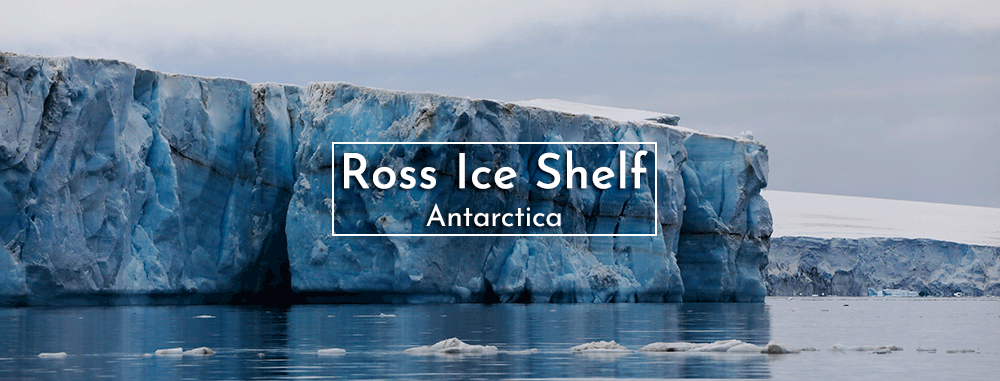
- 25 Apr 2024
Why is it in the News?
New research has found a "missing piece of the puzzle" of West Antarctic Ice Sheet melt, revealing that the collapse of the ice sheet in the Ross Sea region can be prevented—if we keep to a low-emissions pathway.
About Ross Ice Shelf:
- The Ross Ice Shelf is a floating mass of land-ice, with a front between 15 and 50 meters high. ?
- It is the largest ice shelf in Antarctica.
- Situated in the Ross Sea, it extends off the coast into the ocean, covering an impressive 487,000 square kilometers, roughly the size of France.
- Despite its vast surface area, only 10% of the ice shelf is visible above the water, mostly concealed beneath hundreds of meters of ice.
- The thickness of the Ross Ice Shelf varies significantly, ranging from about 100 meters to several hundred meters at its thickest points near the areas where the shelf connects to the Antarctic continent.
- The formation of the Ross Ice Shelf is the result of snow accumulation and compaction over time, which ultimately transforms into ice.
- It is continuously fed by glaciers draining from both the East and West Antarctic Ice Sheets, creating a balance as new ice is added while existing ice is removed through melting at the base and calving at the front.
- This massive ice shelf plays a critical role in stabilizing the Antarctic ice sheet.
About the Ross Sea:
- Location and Size: The Ross Sea is a vast, remote bay located just 320 km from the South Pole, positioned south and slightly east of New Zealand.
- It covers an area of approximately 370,000 square miles (960,000 square km), making it the largest polar marine ecosystem in the world.
- The sea's dynamics are significantly shaped by the coastal East-Wind Drift, which establishes a vast clockwise gyre, complemented by deepwater upwelling phenomena.
- Notably, it holds the distinction of being Antarctica's first protected area, serving as a habitat for a plethora of penguin species and numerous whale species.
- Depth: Despite its vast size, the Ross Sea is relatively shallow, with an average depth of approximately 530 meters.
- Historical Exploration: The sea is named after British explorer Sir James Clark Ross, who first visited the area in 1841 during his expedition to Antarctica.
- The Ross Sea's importance to both the scientific community and global conservation efforts cannot be overstated, as it provides valuable insights into the effects of climate change on polar ecosystems.
Global Tiger Conservation Coalition
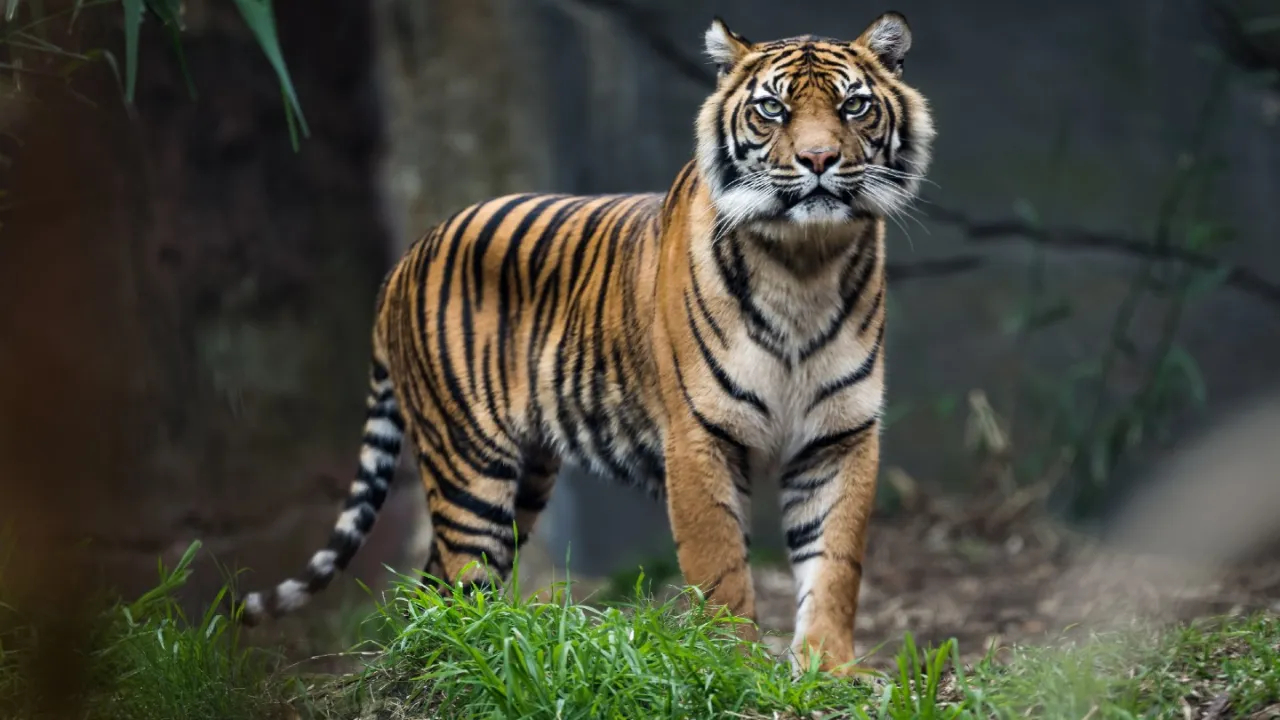
- 25 Apr 2024
Why is it in the News?
At the Sustainable Finance for Tiger Landscapes Conference, Bhutan and the Tiger Conservation Coalition pledged to mobilize $1 billion for tiger conservation efforts.
About the Tiger Conservation Coalition:
- The Tiger Conservation Coalition is a group of non-governmental organizations (NGOs) that have worked for many years with partners to conserve tigers.
- It brings together leading tiger biologists and experts in wildlife crime, human-wildlife coexistence, policy, finance, development, and communications with unprecedented alignment on achieving tiger conservation at scale.
- Its member organizations include the Environmental Investigation Agency (EIA), Fauna & Flora, the International Union for Conservation of Nature and Natural Resources (IUCN), Panthera, TRAFFIC, United Nations Development Programme (UNDP), Wildlife Conservation Society (WCS) and World Wide Fund for Nature (WWF).
- It is an independent group of organizations that combines and shares the vast knowledge, on-the-ground experience, and data of its members and partners to support Tiger Range Countries in developing and implementing effective approaches to tiger conservation.
- The Coalition was founded on strong relationships among eminent tiger experts already working together on major tiger assessments, including the latest assessment by the IUCN Red List of Threatened Species released in 2022, and the forthcoming Green Status Assessment, and coalesced around a common vision for tiger recovery.
- By engaging national and local civil society organizations from the region, and continuing to support the Global Tiger Initiative Council and the Global Tiger Forum, the coalition aims to further strengthen partnerships and impactful outcomes for tigers.
- In January 2022, the Tiger Conservation Coalition released its vision for tiger recovery through 2034, the next Year of the Tiger.
- “Securing a Viable Future for the Tiger” presents a set of measurable goals and high-level strategic approaches to achieve the long-term presence of viable and ecologically functional populations of wild tigers.
- Its suggested actions, grounded in the latest science and results, would lead to increasing numbers of tigers secure in current and expanded protected habitats, with distribution and connectivity across their indigenous range.
- Tiger Conservation Coalition members co-developed Tiger Conservation Landscapes 3.0, an integrated habitat modeling system to measure and monitor changes in tiger habitat at range-wide, national, biome, and landscape scales in near real-time.
- This work serves as a model for objective, range-wide, habitat monitoring as countries work to achieve the goals laid out in the 30x30 agenda, the Sustainable Development Goals, and the Kunming-Montreal Global Biodiversity Framework.
Global Report on Food Crises (GRFC) 2024
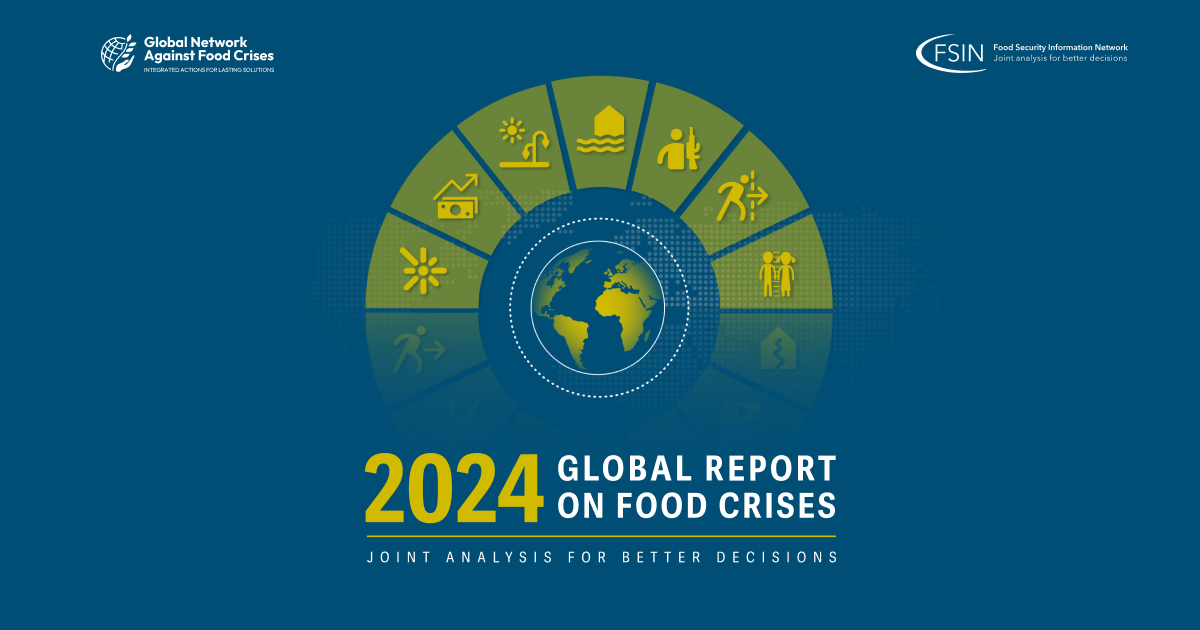
- 25 Apr 2024
Why is it in the News?
Nearly 282 million people faced high levels of acute food insecurity in 59 countries in 2023, with extreme weather being the second most significant factor driving food crisis, revealed the 2024 Global Report on Food Crisis (GRFC) released April 24, 2024.
About Global Report on Food Crises (GRFC) 2024:
- The Global Report on Food Crises (GRFC) 2024, released annually by the Food Security Information Network (FSIN), provides a comprehensive analysis of global food crises and their causes.
- Launched by the Global Network Against Food Crises, a multistakeholder initiative involving United Nations agencies, the European Union, the United States Agency for International Development, and various non-governmental agencies, the report highlights the alarming state of food insecurity worldwide.
Key findings from the GRFC 2024 include:
- Analysis of 1.3 billion people in 59 countries in 2023, with nearly 282 million facing high levels of acute food insecurity.
- Identification of 2023 as the fifth consecutive year of rising numbers of people suffering acute food insecurity, defined as life or livelihood-threatening food deprivation.
- Conflicts, extreme weather events, and economic shocks have been identified as the primary drivers behind worsening food crises globally.
- Conflict hotspots like Palestine's Gaza Strip and Sudan experienced a significant escalation in food crises during 2023, with conflict and insecurity becoming the main drivers in 20 countries, directly affecting 135 million people.
- The Gaza Strip emerged as the area with the most severe food crisis over the past eight years of GRFC reporting, while Sudan is facing one of the worst food crises globally, with nearly one-third of its population in need of emergency food assistance.
- Weather extremes were the main driver in 18 countries, causing over 72 million people to face high levels of acute food insecurity.
- The 10 countries experiencing the largest food crises in 2023 included the Democratic Republic of Congo, Nigeria, Sudan, Afghanistan, Ethiopia, Yemen, Syria, Bangladesh, Pakistan, and Myanmar.
- On a positive note, the food crisis improved in 17 countries, including the Democratic Republic of Congo and Ukraine.
- The GRFC 2024 report emphasizes the urgent need for coordinated global efforts to address the root causes of food crises and enhance the resilience of vulnerable populations.
- By understanding and responding to these challenges, we can work towards a more food-secure future for all.
International Conference on Disaster Resilient Infrastructure (ICDRI)
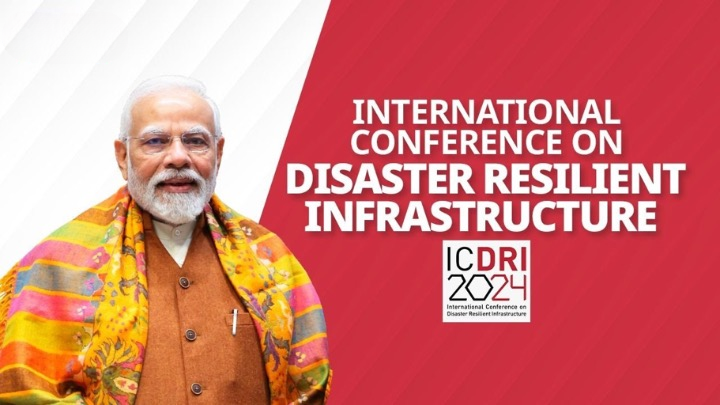
- 25 Apr 2024
Why is it in the News?
Countries must build “resilient infrastructure” against natural disasters that are becoming more frequent and severe, said Prime Minister Narendra Modi recently.
About the Coalition for Disaster-Resilient Infrastructure (CDRI):
- The Coalition for Disaster-Resilient Infrastructure (CDRI) is a global partnership comprising national governments, UN agencies and programs, multilateral development banks, private sector entities, and academic institutions.
- Established during the United Nations Climate Action Summit in 2019 in New York, CDRI is dedicated to addressing the challenges associated with building resilience in infrastructure systems and development processes.
Objectives:
- CDRI aims to enhance the resilience of infrastructure systems to climate and disaster risks, thereby promoting sustainable development.
- It seeks to expedite the development and retrofitting of resilient infrastructure to meet the imperatives of the Sustainable Development Goals, including universal access to basic services and fostering prosperity and decent work.
- Serving as an inclusive multi-stakeholder platform, CDRI is led and managed by national governments. It facilitates the exchange of knowledge on various aspects of infrastructure resilience.
- CDRI brings together diverse stakeholders to create mechanisms assisting countries in upgrading their capacities, systems, standards, regulations, and practices related to infrastructure development, tailored to their risk contexts and economic needs.
Membership:
- Since its inception, 39 countries, 7 international organizations, and 2 private sector organizations joined as members.
- International organizations include:
- The Asian Development Bank (ADB)
- World Bank Group
- United Nations Development Programme (UNDP)
- United Nations Office for Disaster Risk Reduction (UNDRR)
- European Union
- European Investment Bank, and
- The Private Sector Alliance for Disaster-Resilient Societies (ARISE)
- The CDRI is the second major coalition launched by India outside of the UN, the first being the International Solar Alliance.
Secretariat:
- CDRI's secretariat is based in New Delhi, India.
Golden trevally Fish
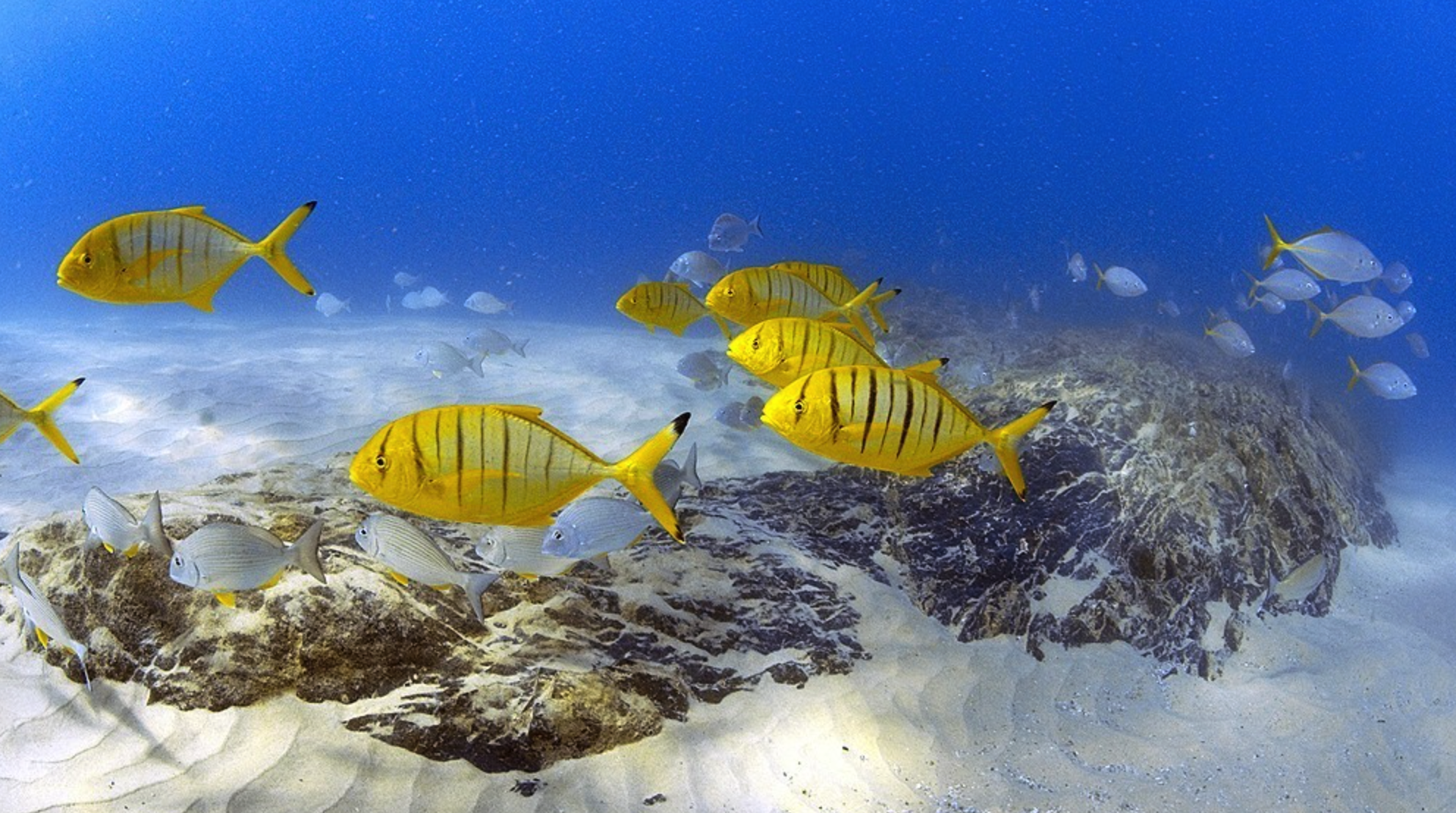
- 24 Apr 2024
Why is it in the News?
The golden trevally, a popular marine fish on Tamil Nadu’s coastline, has been successfully bred in captivity by scientists at ICAR-CMFRI’s Visakhapatnam station.
What is Golden trevally Fish?
- The Golden Trevally (Gnathanodon speciosus), also known as the Golden Kingfish or Banded Trevally, is a popular and fascinating marine fish species found in the Indo-Pacific and Eastern Pacific regions.
- It typically inhabits deep lagoons and seaward reefs, often in association with larger fish species.
- This fish is highly sought-after for both consumption and ornamental purposes due to its faster growth rates, good meat quality, and attractive appearance.
- According to fish landing observations in India, golden trevally are primarily landed at reef area fishing grounds in Tamil Nadu, Puducherry, Kerala, Karnataka, and Gujarat.
About the Central Marine Fisheries Research Institute (CMFRI):
- CMFRI was established in 1947 under India's Ministry of Agriculture and Farmers Welfare.
- It joined the Indian Council of Agricultural Research (ICAR) in 1967.
The institute's primary objectives include:
- Monitoring exploited marine fisheries resources and assessing under-exploited resources within India's Exclusive Economic Zone.
- Understanding fluctuations in marine fisheries resources in response to environmental changes.
- Developing sustainable mariculture technologies for finfish, shellfish, and other organisms to supplement capture fishery production.
- The CMFRI's notable achievements include developing the "Stratified Multistage Random Sampling Method" for estimating fishery catch and effort along India's 8,000 km coastline.
- Headquartered in Kochi, Kerala, the institute continues to contribute significantly to the growth and development of India's marine fisheries sector.
State of the Climate in Asia 2023 Report
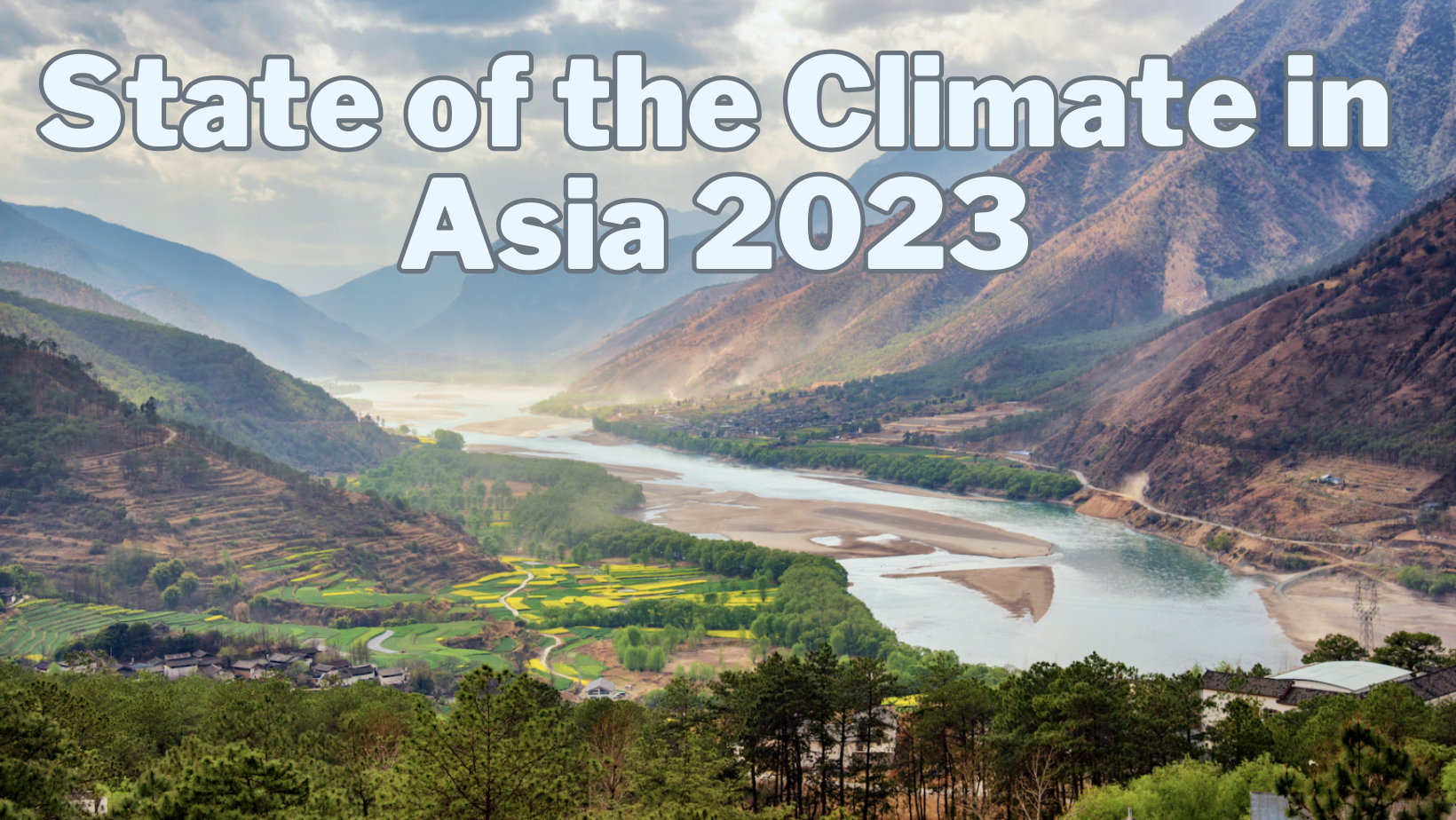
- 24 Apr 2024
Why is it in the News?
As Asia is warming faster than the global average, it is witnessing more extreme weather, climate, and water-related events than any other region across the world.
Highlights of the State of the Climate in Asia 2023 Report:
- The 2023 State of the Climate in Asia Report, spearheaded by the World Meteorological Organization, sheds light on significant climate trends and events across the continent:
- In 2023, Asia witnessed 79 extreme climate events, affecting over nine million individuals, making it the most disaster-affected region.
- Atmospheric concentrations of carbon dioxide, methane, and nitrous oxide soared to unprecedented levels in 2022.
- Oceans have absorbed approximately a quarter of the carbon dioxide emitted annually into the atmosphere since 1960, resulting in record-high ocean heat content in 2023.
- Tropical cyclone activity over the North Indian Ocean surpassed the average.
- 2023 marked Asia's second-highest mean temperature on record, with Japan and Kazakhstan experiencing record warmth.
- Glacial retreat accelerated in 2023, particularly in the East Himalayas and Central Asia's Tian Shan mountains, due to elevated temperatures and arid conditions.
About the World Meteorological Organisation:
- The World Meteorological Organization (WMO) is a specialized agency of the United Nations with a membership of 193 member states and territories.
- It is the UN system's authoritative voice on the state and behavior of the Earth's atmosphere, its interaction with the oceans, the climate it produces, and the resulting distribution of water resources.
- WMO originated from the International Meteorological Organization, the roots of which were planted at the 1873 Vienna International Meteorological Congress.
- Established by the ratification of the WMO Convention on 23 March 1950, WMO became the specialized agency of the United Nations for meteorology (weather and climate), operational hydrology, and related geophysical sciences a year later.
- The Secretariat, headquartered in Geneva, is headed by the Secretary-General.
- Its supreme body is the World Meteorological Congress.
Psychoanalysis
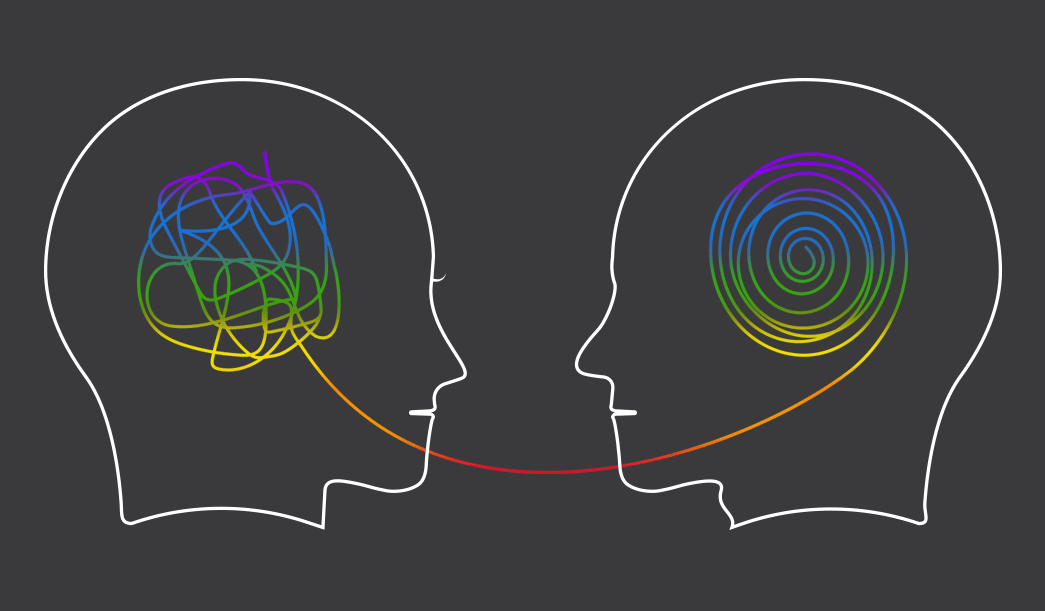
- 24 Apr 2024
Why is it in the News?
Sudhir Kakar, a pioneering Indian psychoanalyst, author, and cultural critic, passed away on Monday at the age of 85.
What is Psychoanalysis?
- Psychoanalysis is a set of psychological theories and therapeutic methods that focus on the unconscious mind, as well as the role of repressed emotions and desires in shaping behavior and mental health.
- Developed by Sigmund Freud in the late 19th and early 20th centuries, psychoanalysis is based on the idea that many of our thoughts, feelings, and actions are influenced by unconscious motives and conflicts, often rooted in childhood experiences.
- Psychoanalysis has three core components:
- A method of investigation of the mind and the way one thinks.
- A systematized set of theories about human behavior.
- A method of treatment for psychological and emotional issues.
- Key concepts in psychoanalysis include the id, ego, and superego (the structural model of the psyche), the Oedipus complex, defense mechanisms (such as repression, denial, and projection), and dream interpretation.
- During psychoanalysis therapy, a patient works closely with a therapist to explore and understand unconscious thoughts and feelings, often by discussing dreams, memories, and other experiences.
- The goal is to bring repressed emotions to the surface and address any underlying conflicts in order to alleviate mental distress and improve overall well-being.
- While psychoanalysis has had a significant influence on psychology and mental health treatment, it remains a controversial approach due to its lack of scientific rigor and emphasis on subjective interpretation.
- Nevertheless, many of its concepts have been adapted or integrated into other forms of therapy, and psychoanalysis remains an important part of the history and development of psychology.
Significance:
- It has profoundly impacted the fields of psychology and mental health treatment, as well as culture, literature, and the arts. Its significance can be understood through the following points:
- Foundational Role: Psychoanalysis provided a groundbreaking approach to understanding the human mind and behavior, shifting the focus from conscious experiences to unconscious mental processes.
- Influence on Psychology: Many concepts introduced by psychoanalysis, such as the unconscious mind, defense mechanisms, and the influence of early childhood experiences, have been adopted and adapted by various schools of psychology, including cognitive-behavioral, humanistic, and psychodynamic approaches.
- Therapeutic Approach: Psychoanalysis revolutionized the way mental health issues were treated, moving away from a purely medical model and emphasizing the importance of talking therapy in addressing psychological problems.
- Cultural Impact: The ideas of psychoanalysis have permeated culture, literature, and the arts, influencing our understanding of human motivations, relationships, and emotions. Concepts like Freudian slips, dream interpretation, and the Oedipus complex have become part of everyday language.
- Interdisciplinary Applications: The principles of psychoanalysis have been applied in fields beyond psychology, including sociology, anthropology, literature, and film studies.
- Despite criticisms and revisions, psychoanalysis remains a significant and influential theory that has shaped our understanding of the human mind and behavior.
- It continues to contribute to the development of psychological theories and therapeutic approaches, enriching our comprehension of mental health and human nature.
Crystal Maze-2 Missile
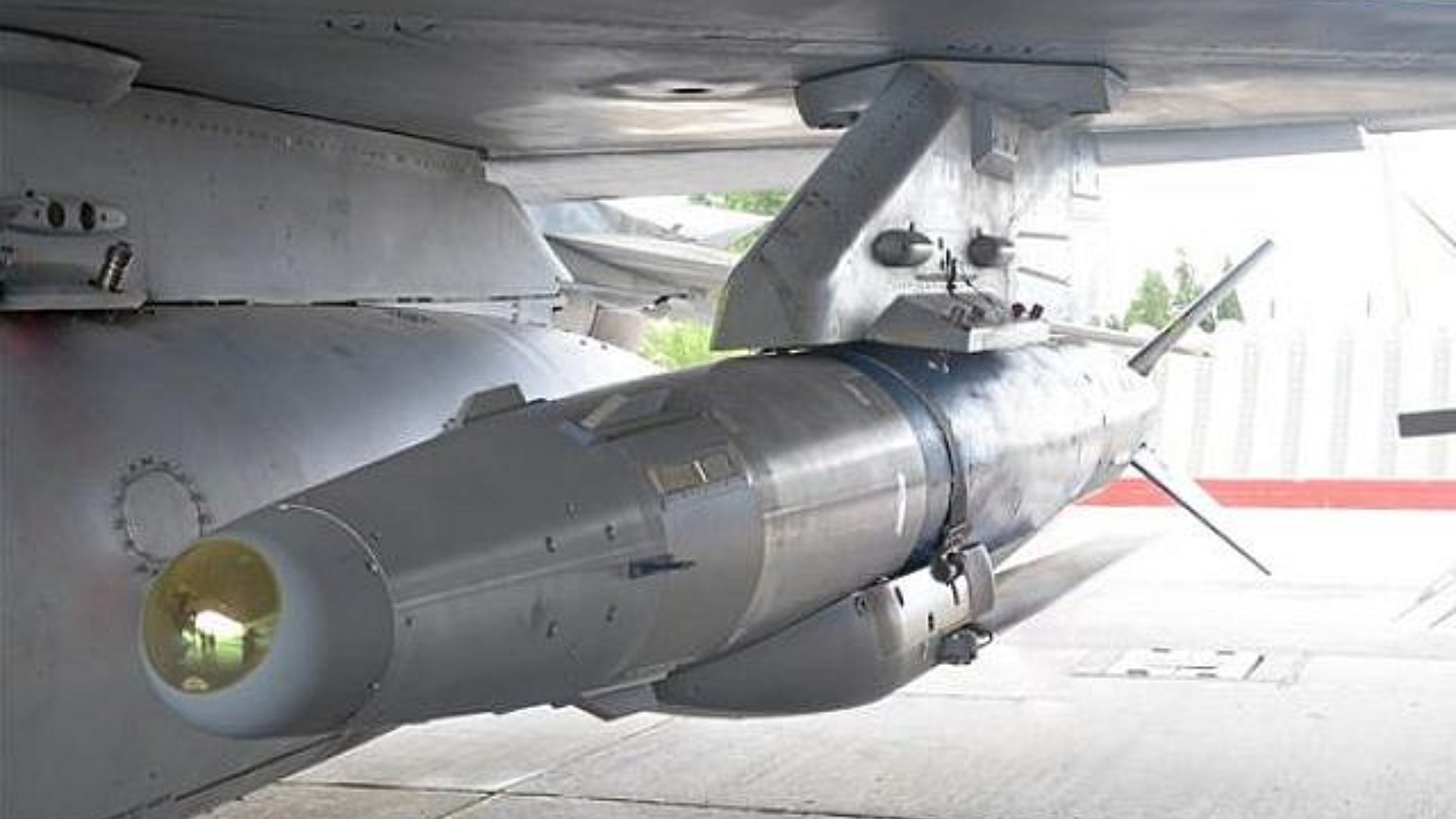
- 24 Apr 2024
Why is it in the News?
The Indian Air Force achieved a milestone by successfully test-firing an air-launched ballistic missile, ROCKS or Crystal Maze 2, capable of hitting targets over 250 kilometers away.
About Crystal Maze-2 Missile:
- Crystal Maze 2 missile also known as ROCKS is an advanced air-launched missile developed by Israel, designed for precision strikes on high-value targets.
- This missile is capable of engaging heavily fortified positions from long distances, ensuring minimal collateral damage.
- It is renowned for its accuracy and reliability in combat scenarios, making it a preferred choice for missions requiring surgical precision.
- The missile’s integration into various platforms enhances its operational flexibility and effectiveness in diverse combat environments.
Features:
- Crystal 2 operates effectively in GPS-denied areas and can breach regions secured by air defense systems.
- This system allows for the choice between penetration or blast fragmentation warheads, making it suitable for targeting both surface and heavily fortified underground facilities.
- With a striking distance of over 250 kilometers, it offers versatility with options for either penetration or blast fragmentation warhead, ensuring the destruction of above-ground or well-protected underground targets.
- India is currently developing the Crystal Maze 2 missile.
- The Indian Air Force (IAF) has successfully conducted tests on this missile and aims to procure it in large numbers under the Make in India initiative.
- This move highlights India’s dedication to achieving self-sufficiency in defense manufacturing.
Marburg virus disease (MVD)
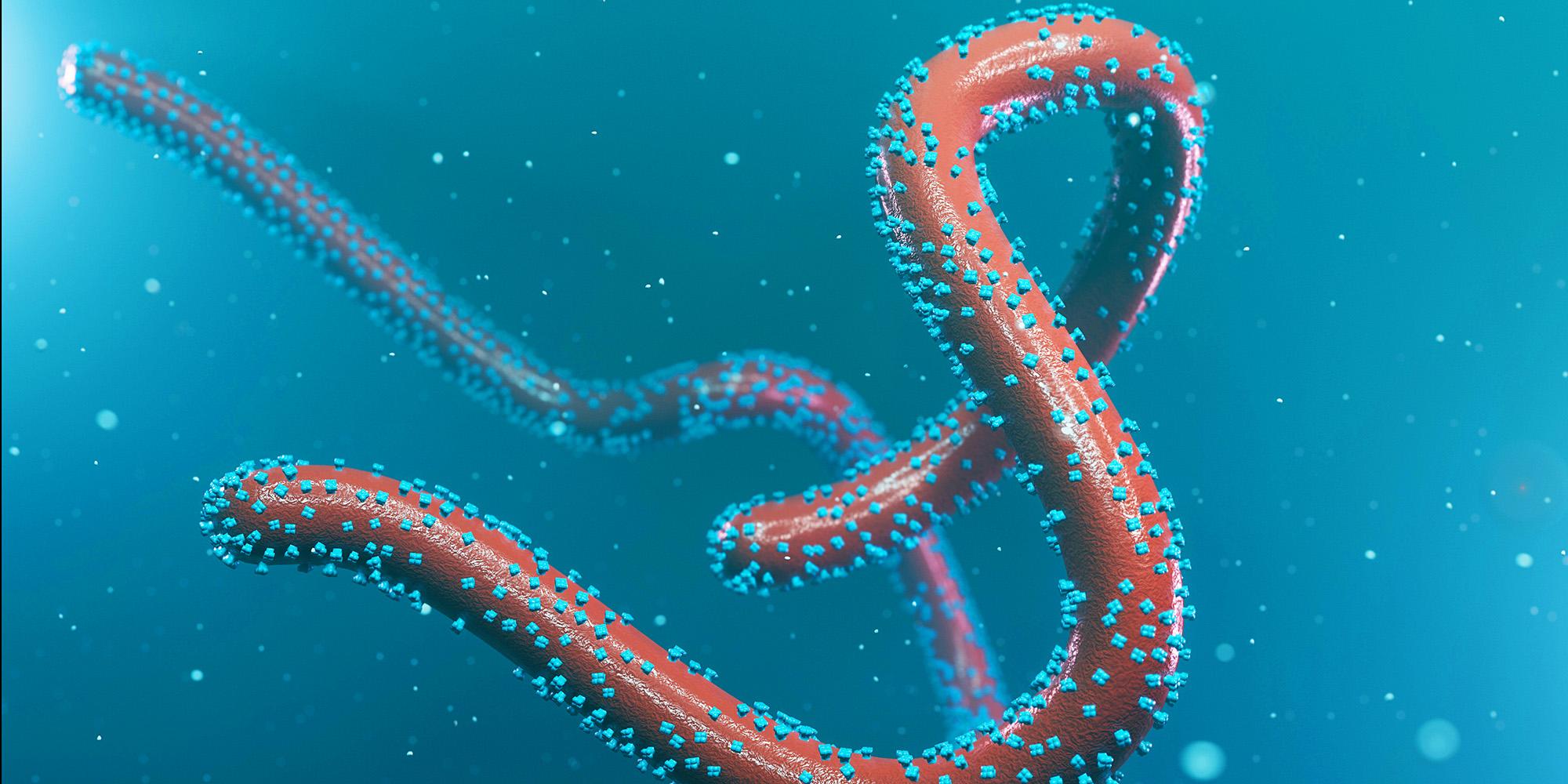
- 24 Apr 2024
Why is it in the News?
The Kitum cave in Mount Elgon National Park, Kenya, is known as the world's deadliest cave which may have some really dangerous viruses inside, like Ebola and Marburg.
What is Marburg Virus Disease (MVD)?
- Marburg virus disease (MVD), formerly known as Marburg hemorrhagic fever, is a severe, often fatal illness in humans.
- It affects both people and non-human primates.
- Marburg and Ebola viruses are both members of the Filoviridae family (filovirus).
- Though caused by different viruses, the two diseases are clinically similar.
- Both diseases are rare and can cause outbreaks with high fatality rates.
- The average MVD case fatality rate is around 50%.
- Rousettus aegyptiacus, fruit bats of the Pteropodidae family, are considered to be natural hosts of the Marburg virus.
Transmission:
- Human infection with MVD typically occurs after prolonged exposure to Rousettus bats inhabiting mines or caves.
- The virus can then spread through human-to-human transmission via direct contact with infected bodily fluids, contaminated materials, or broken skin and mucous membranes.
Symptoms:
- After an incubation period of 2-21 days, symptoms arise abruptly, including fever, chills, headache, and muscle pain.
- A maculopapular rash may appear around day five, most visible on the chest, back, and stomach.
- Other symptoms, such as nausea, vomiting, chest pain, sore throat, abdominal pain, and diarrhea, can manifest, with severity increasing to potentially include jaundice, organ dysfunction, severe weight loss, delirium, and massive hemorrhaging.
- The average MVD case fatality rate is around 50%, varying between 24% and 88% in past outbreaks.
Treatment:
- There is currently no specific treatment for MVD, but early supportive care involving rehydration and symptom management improves survival rates.
Viral Hemorrhagic Fevers (VHFs):
- Viral Hemorrhagic Fever (VHFs) is a group of diseases caused by several distinct families of viruses that affect multiple organ systems in the body.
- These illnesses range from mild to severe and life-threatening, with many having no known cure or vaccine.
- VHFs negatively impact the cardiovascular system and reduce overall bodily function.
Project Nimbus
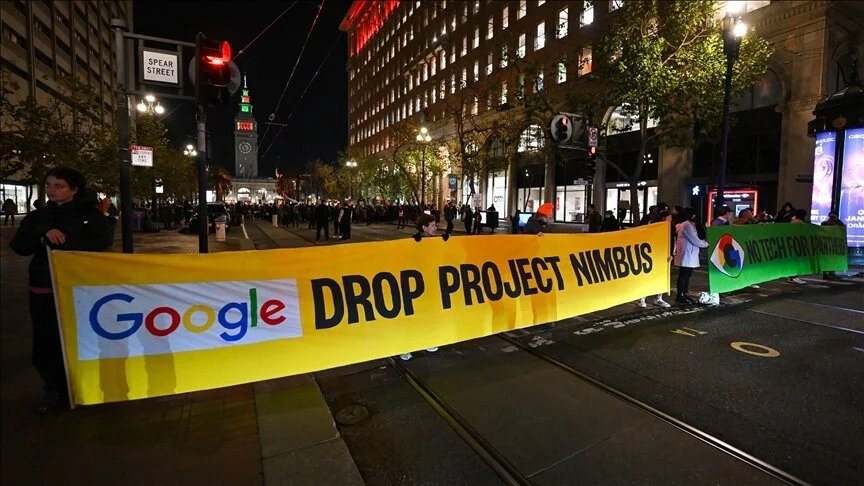
- 23 Apr 2024
Why is it in the News?
Google's employees staged protests against the company's collaboration with the Israeli government on "Project Nimbus", a $1.2 billion cloud computing initiative.
What is Project Nimbus?
- Google’s Project Nimbus is a $1.2 billion cloud computing initiative with the Israeli government.
- The project aims to provide public cloud services to address challenges within various sectors in Israel, including healthcare, transportation, and education in Israel.
- However, the project has sparked controversy leading to protests and layoffs within the company.
- Project Nimbus involves Google establishing a secure instance of Google Cloud on Israeli soil.
- This would allow the Israeli government to perform large-scale data analysis, AI training, database hosting, and other forms of powerful computing using Google’s technology.
- The project is a joint contract between Google and Amazon signed in 2021.
- As part of the agreement, Google Cloud will work with the public sector on the formulation of best practices for cloud migration, integration, and optimization of cloud services.
- According to the official announcement in the year 2021, Google Cloud will also provide training to the country’s technical government employees and senior leaders to enhance digital skills.
What is the Controversy Surrounding Project Nimbus?
- Despite the potential benefits, Project Nimbus has sparked controversy due to concerns about the potential misuse of AI and other technologies.
- Employees fear that the technology developed under Project Nimbus could be used in harmful ways.
- There have been reports suggesting that Israel is using AI to eliminate its targets.
- Israeli outlets +972 Magazine and Local Call claimed that two AI systems, "Lavender" and "Where's Daddy?" were used to identify 37,000 Hamas operatives.
- However, there's no official confirmation regarding any connection between Project Nimbus and these AI systems.
- The use of AI also causes concern as it is still a relatively new technology on the battlefield and is yet to be regulated by governments across the globe.
Google Response to the Accusations Regarding Project Nimbus?
- Google clarified that the project is intended for use by Israeli government ministries in areas such as finance, healthcare, transportation, and education, emphasizing that it is not aimed at handling highly sensitive or classified military operations related to weaponry or intelligence services.
Netzah Yehuda Battalion

- 23 Apr 2024
Why is it in the News?
The US government may soon sanction a battalion of the Israeli Defence Forces (IDF) over alleged human rights violations, marking the first such move in the history of the two countries’ relations.
What is the Netzah Yehuda Battalion?
- The Netzah Yehuda battalion was set up in 1999 to accommodate the religious beliefs of ultra-Orthodox Jews and other religious nationalist recruits in the army.
- It was established to facilitate military service for these communities, accommodating their religious observances by scheduling prayer and study times, and restricting their interactions with female soldiers.
- The battalion is historically stationed in the occupied West Bank region and faces intense scrutiny for allegedly committing human rights violations against Palestinians.
- Netzah Yehuda came on the radar of United States agencies after the death of an elderly Palestinian-American man, who was detained by the battalion.
What is the Unit Accused Of?
- The United States called for a criminal investigation after Netzah Yehuda soldiers were accused of being involved in the death of a 78-year-old Palestinian-American, Omar Assad, who died of a heart attack in 2022 after he was detained and was later found abandoned at a building site.
- A Palestinian autopsy found Assad died from a stress-induced heart attack brought on by being manhandled.
- The case attracted unusual attention because of his dual nationality, his age, and a demand by the U.S. State Department for an investigation into his death.
- There have been several other incidents in recent years, some captured on video, in which Netzah Yehuda soldiers were accused of, or charged with, abusing Palestinian detainees.
- The battalion primarily operated in the West Bank before it was moved out of the territory in late 2022 after U.S. criticism.
- The unit has recently been serving in Gaza.
Star Campaigners
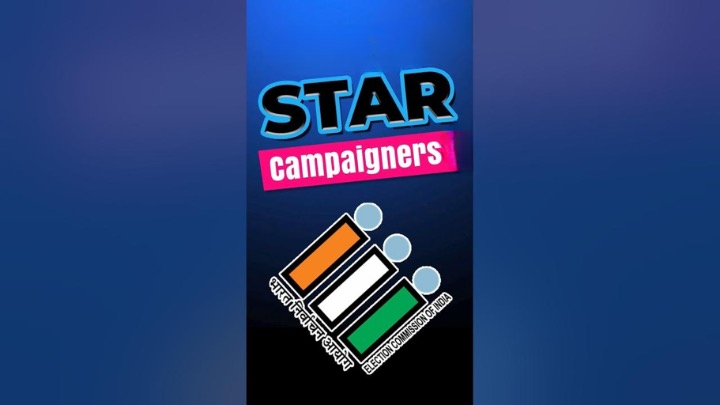
- 23 Apr 2024
Why is it in the News?
In the current general elections, political parties are selecting 'star campaigners' to lead their campaigns.
What are Star Campaigners in Election?
- Star campaigners are popular individuals with significant fan followings and are chosen by political parties to contest or campaign during elections.
Legal Provisions:
- The Representation of the People Act, 1951 (RPA) governs the expenditure incurred by 'leaders of a political party,' commonly referred to as star campaigners.
- A recognized political party (National or State) can appoint a maximum of 40-star campaigners.
- A registered unrecognized political party can appoint up to 20.
- The names of star campaigners must be communicated to the Election Commission (EC) and Chief Electoral Officer (CEO) within seven days from the date of election notification.
- For multi-phase elections, political parties can submit separate lists of star campaigners for different phases.
Expenses and Apportionment:
- If a star campaigner seeks votes for contesting candidates or shares the dais with them, rally/meeting expenses are apportioned to the election expenditure of those candidates.
- Boarding/lodging expenses incurred by the star campaigner while campaigning for candidates are included in the expenditure accounts of those candidates.
- If candidates travel with the star campaigner, 50% of the star campaigner's travel expenditure is apportioned to those candidates.
Special Cases:
- When a Prime Minister or former Prime Minister serves as a star campaigner, the government bears the expenditure on security, including bullet-proof vehicles.
- However, if the Prime Minister is accompanied by another star campaigner, the candidate must bear 50% of the expenditure on security arrangements.
Tundra Ecosystem
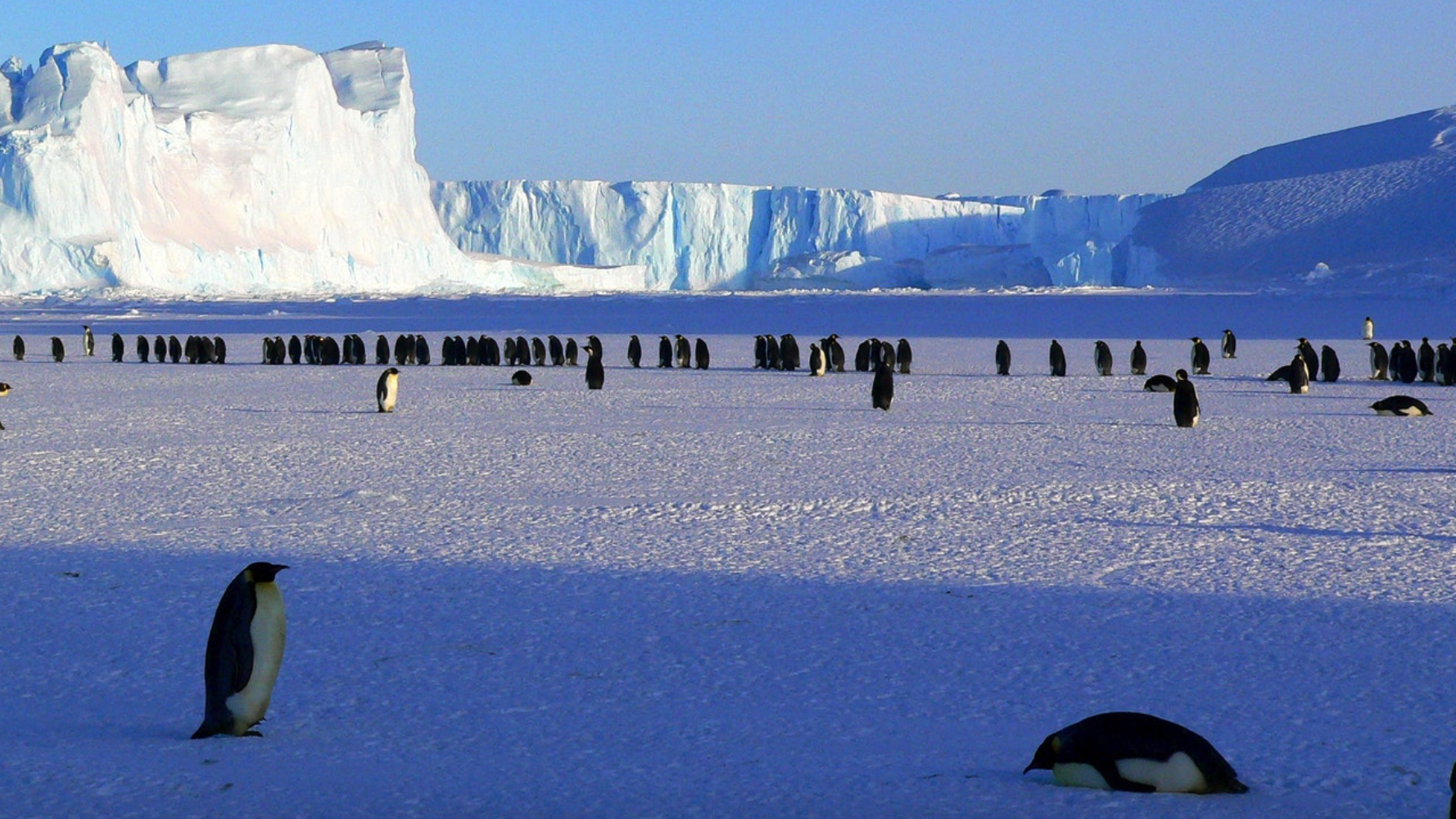
- 23 Apr 2024
Why is it in the News?
A recent study has warned that the warming planet may alter the characteristics of tundra environments and could transform them from carbon sinks to carbon sources.
About Tundra Ecosystem:
- The Tundra ecosystem is one of the unique ecosystems of the planet.
- The adverse climatic conditions of tundra regions like dry winds, meager precipitation, and extreme cold make it a unique and desert-like ecosystem with treeless fields.
- These harsh climatic conditions of the tundra region make the survival of plant and animal species quite severe.
Key Characteristics of Tundra Regions:
- Low Temperatures: Tundra areas experience frigid temperatures, ranging from -34 to -6 degrees Celsius (-30 to 20 degrees Fahrenheit).
- Short Growing Seasons: The tundra's summer growth period lasts merely 50 to 60 days, with sunlight persisting up to 24 hours a day.
- Permafrost: Below the surface lies a layer of permanently frozen soil, varying from a few inches to several feet thick.
- Minimal Precipitation: Despite being likened to deserts in terms of moisture, tundra regions receive low precipitation levels, primarily in the form of snow.
- Limited Biodiversity: Harsh conditions in the tundra support fewer plant and animal species compared to other biomes.
- Carbon Sink: Tundras serve as significant carbon storage areas due to the slow decomposition rates in their cold environments.
Types of Tundra:
- Arctic Tundra: Found north of the taiga belt in the far Northern Hemisphere, encompassing regions between the North Pole and the boreal forest, including parts of Canada, Russia, Greenland, Iceland, Norway, Sweden, and Finland.
- Alpine Tundra: Prevails above the tree line in mountain ranges worldwide, such as the Rockies, the Andes, the Himalayas, and the Alps.
- Antarctic Tundra: Encompasses several sub-Antarctic islands and portions of the Antarctic continent.
Flora and Fauna:
- Flora: Common plant species in tundra regions include mosses, lichens, sedges, cotton grass, and birches.
- Fauna: Wildlife in tundra ecosystems includes Arctic foxes, snow geese, polar bears, and other cold-adapted species.
Survey of India (SoI)
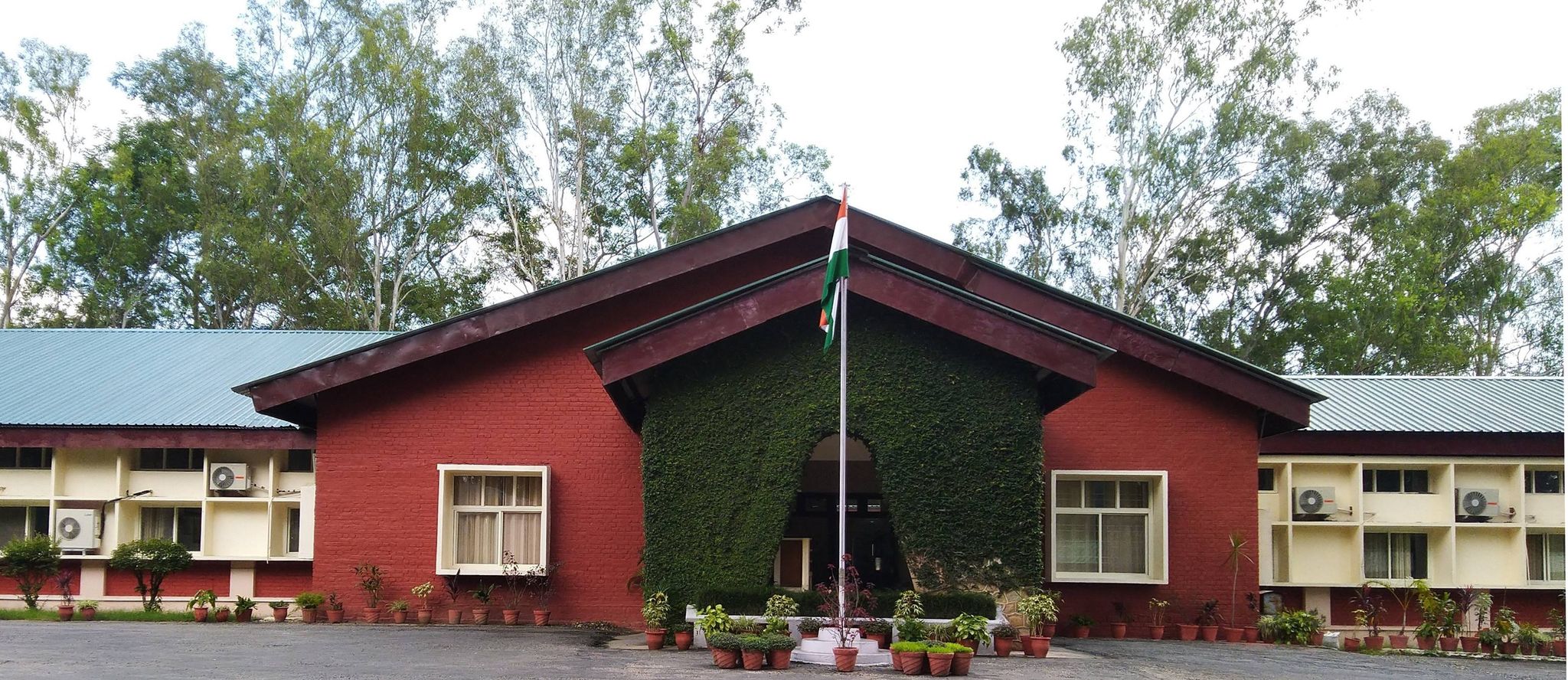
- 23 Apr 2024
Why is it in the News?
The Tamil Nadu government filed its objections in the Supreme Court recently, about the Survey of India (SOI) report on the construction of the mega car parking project near the Mullaiperiyar dam, and sought rejection of the report.
What is the Survey of India (SoI)?
- The Survey of India (SoI) serves as the National Survey and Mapping Organization of India, operating under the Department of Science and Technology.
- Established in 1767, it holds the distinction of being the oldest scientific department within the Government of India.
- Tasked with the critical role of being the country's primary mapping agency, SoI bears the responsibility of thoroughly exploring and mapping India's terrain to furnish foundational maps for comprehensive and efficient development initiatives.
- Originally comprising only five directorates in 1950, primarily focused on catering to the mapping requirements of the Defense Forces in the Northwest and Northeast regions, the department has since expanded to encompass 18 directorates spread across the nation, ensuring comprehensive map coverage essential for national development.
- SoI's expertise is widely utilized by various ministries and government undertakings for diverse purposes, including delineating international borders, and state boundaries, and facilitating the planned development of previously underserved areas.
- Moreover, SoI actively contributes to numerous national scientific endeavors in fields such as geophysics, remote sensing, and digital data transmission.
- Functioning as a key advisor to the Government of India on all survey-related matters, including geodesy, photogrammetry, mapping, and map reproduction, SoI fulfills a multitude of duties and responsibilities, which include:
- Conducting all geodetic control, geodetic, and geophysical surveys.
- Undertaking topographical control, surveys, and mapping within India.
- Producing geographical maps and aeronautical charts.
- Conducting surveys for developmental projects.
- Mapping forests, cantonments, large-scale city surveys, guide maps, cadastral surveys, etc.
- Engaging in surveys and mapping for specialized purposes.
- Demarcating India's external boundaries, depicting them on published maps, and advising on inter-state boundary demarcation.
- Conducting research and development in cartography, printing, geodesy, photogrammetry, topographical surveys, and indigenization.
- Predicting tides at 44 ports, including 14 foreign ports, and publishing tide tables one year in advance to support navigational activities.
- Reviewing and certifying India's external boundaries and coastline on maps published by other entities, including private publishers.
- Headquartered: Dehradun (Uttarakhand)
Zero Shadow Day
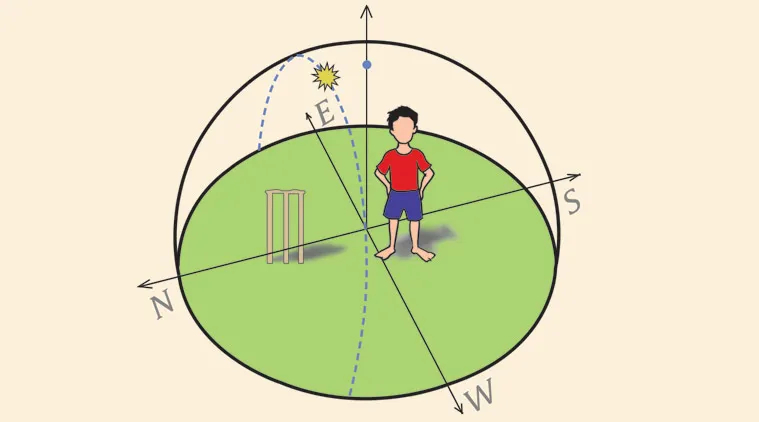
- 22 Apr 2024
Why is it in the News?
A group of students was provided a first-hand experience of the Zero Shadow Day (ZSD) phenomenon at an event organized by the Pondicherry Science Forum (PSF).
What is Zero Shadow Day?
- Zero Shadow Day occurs twice every year in locations between the Tropics of Cancer and Capricorn, where the Sun is positioned directly overhead at noon.
- The shadow typically appears elongated on the ground while being observed under normal circumstances.
- However, when the shadow perfectly aligns under the object, during a short period of time, it remains absent on the ground.
- This happens when the sun reaches the zenith, its highest point of revolution.
- The dates of the occurrence may vary depending on the specific location and its latitude.
Why does Zero Shadow Day occur?
- Zero Shadow Day is caused due to Earth's axial tilt of approximately 23.5 degrees and its orbit around the Sun.
- The Sun is never overhead causing it to maintain a slightly lower altitude either north or south.
- The tilting position is also responsible for different seasons on Earth.
- As the Earth orbits the sun, the angle at which the sun's rays hit the Earth's surface changes, causing shadows to be cast in different directions.
- In regions falling between the Tropic of Cancer (about 23.5 degrees north of the equator) and the Tropic of Capricorn (about 23.5 degrees south of the equator), there are instances when the Sun is exactly overhead.
- Since the sun's rays come down almost vertically, there is no or little shadow on vertical objects.
National Organ and Tissue Transplant Organization (NOTTO)
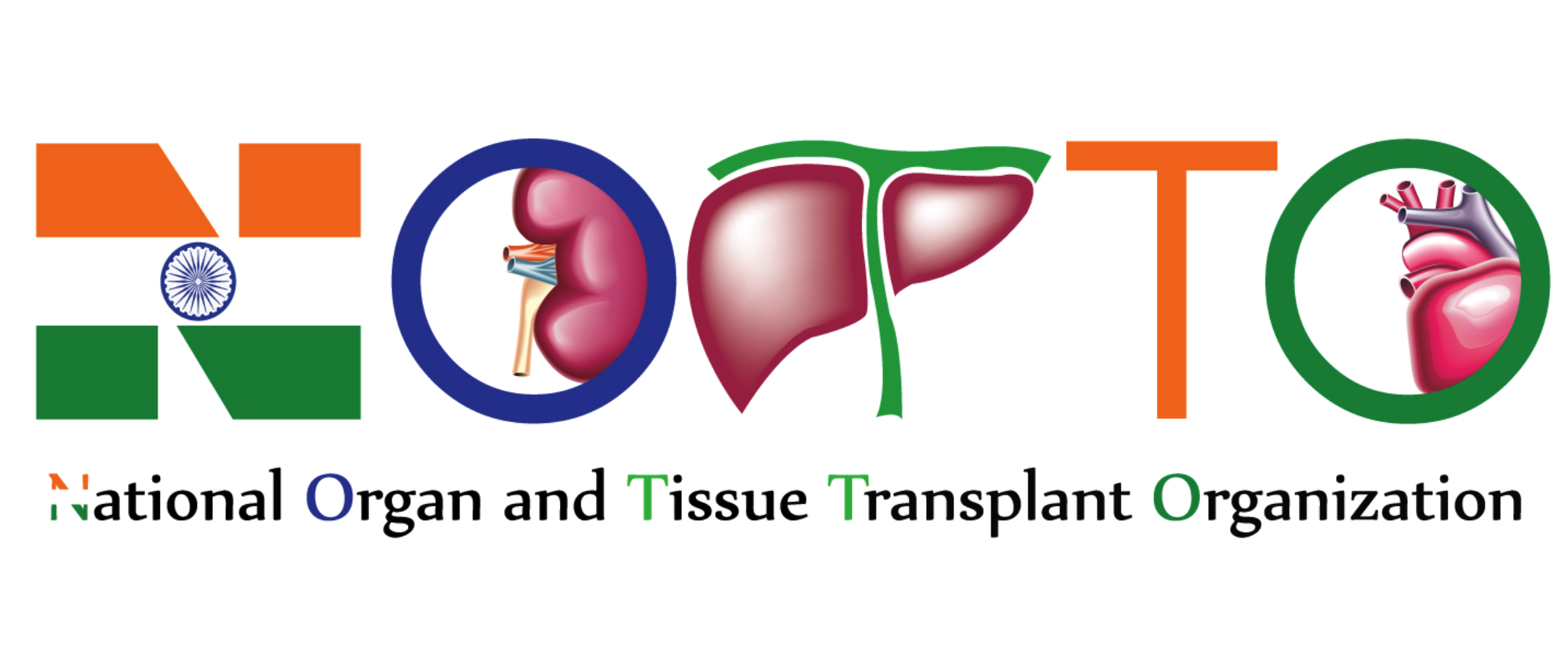
- 22 Apr 2024
Why is it in the News?
Each organ transplant case will receive a distinctive National Organ and Tissue Transplant Organisation (NOTTO) ID assigned to both the donor and the recipient.
Highlights of the News:
- The Union Health Ministry has mandated the cessation of commercial organ transactions, particularly those involving foreign nationals, and emphasized the need for stringent oversight by local authorities.
- For deceased donor transplants, a NOTTO-ID is required for organ allocation, while in living donor transplants, the ID must be generated within 48 hours post-surgery through the NOTTO website by the hospital.
What is the National Organ and Tissue Transplant Organization (NOTTO)?
- NOTTO is a national organization established under the Directorate General of Health Services, Ministry of Health and Family Welfare, Government of India.
It serves as the central coordinating hub for:
- Organ and tissue procurement and distribution.
- Maintaining a registry of organ and tissue donation and transplantation activities across the country.
NOTTO comprises two divisions:
- National Human Organ and Tissue Removal and Storage Network:
- Acts as the primary center for nationwide coordination of organ and tissue procurement, distribution, and registry.
- Established in accordance with the Transplantation of Human Organs (Amendment) Act 2011.
- National Biomaterial Centre (National Tissue Bank):
- This center focuses on filling the gap between demand and supply while ensuring quality assurance in tissue availability.
- The Transplantation of Human Organs (Amendment) Act 2011 has expanded NOTTO's scope to include tissue donation and registration of tissue banks.
Activities performed by NOTTO include:
-
- Coordinating tissue procurement and distribution
- Donor tissue screening
- Tissue removal and storage
- Tissue preservation
- Laboratory screening of tissues
- Tissue tracking
- Sterilization
- Record maintenance
- Data protection and confidentiality
- Quality management in tissues
- Patient information on tissues
- Developing guidelines, protocols, and standard operating procedures
- Training and assistance in registering other tissue banks
BFI Biome Virtual Network Program
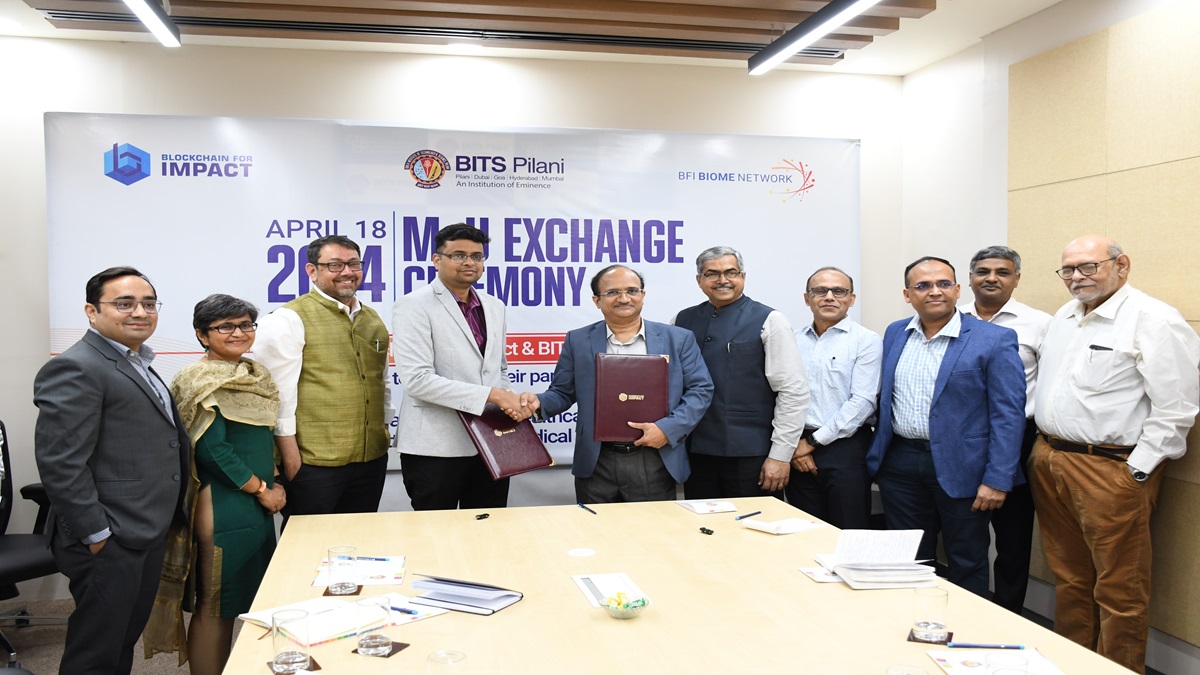
- 22 Apr 2024
Why is it in the News?
Centre for Cellular and Molecular Platforms (C-CAMP) has joined the Blockchain for Impact (BFI) Biome Virtual Network Program to accelerate transformative healthcare solutions through biomedical innovation.
About BFI Biome Virtual Network Program:
- The BFI-Biome Virtual Network Program is a pioneering initiative uniting incubators and research institutes under a single umbrella.
- This fosters collaborations among the stakeholders in the translational pipeline, the process of transforming research discoveries into real-world applications.
- Through this program, BFI will allocate over 200,000 USD over the course of three years, leveraging C-CAMP’s expertise to develop essential programs for healthcare-based startups.
- C-CAMP being an organization to foster deep science research and innovation for societal impact, the goals and mandates of both partners naturally align and complement each other.
- The partnership is expected to blur disciplinary boundaries in approaching biotech R&D, promote cross-integration of expertise and infrastructure, and provide multidisciplinary insights into need identification, problem-solving, and solution implementation.
What is C-CAMP?
- Centre for Cellular And Molecular Platforms (C-CAMP) is an initiative of the Dept of Biotechnology, Ministry of Science and Technology, Govt. of India, with a mandate to be an enabler of cutting edge Life Science Research and Innovation.
- C-CAMP is also a member of the Bangalore Life Sciences Cluster (BLiSC).
- It facilitates Bioscience Research and Entrepreneurship by providing Research, Development, Training, and Services in state-of-the-art Technology Platforms.
- As a part of C-CAMP's mandate of promoting entrepreneurship and innovation, C-CAMP has created and fostered an entrepreneur-friendly culture in and around the Academic/Research environment through its involvement in Seed Funding Schemes for Startups, Entrepreneur Mentorship program, and Bio-Incubation facility.
- It has established State-Of-The-Art Platform Technologies which are essential requirements for success and leadership in the field of Life Sciences.
- C-CAMP allows Investigators to use Techniques as tools and not be limited by Technological barriers while pursuing challenging scientific questions.
Global Financial Stability Report (GFSR)
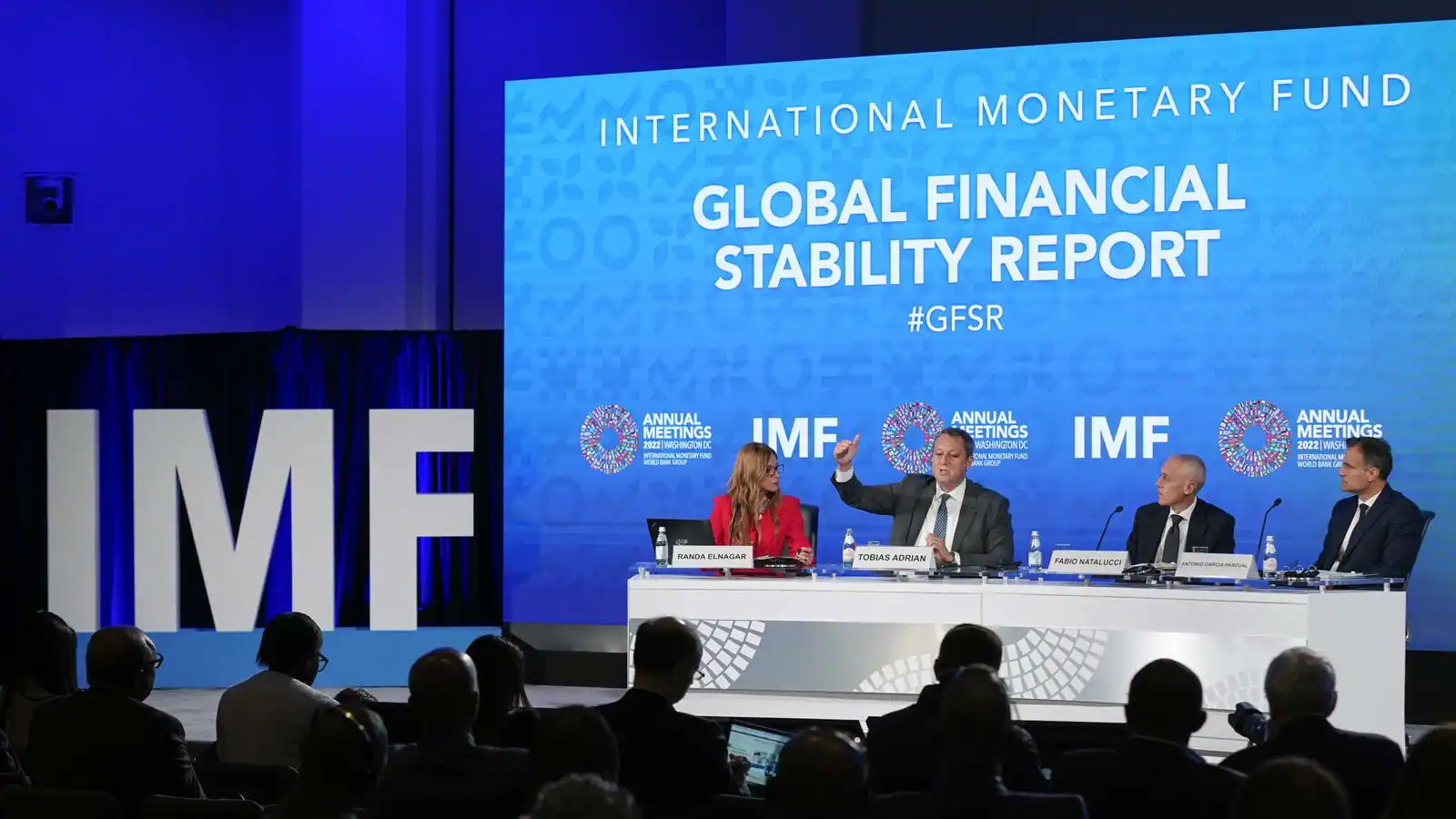
- 22 Apr 2024
Why is it in the News?
The International Monetary Fund (IMF) released the latest global financial stability.
About Global Financial Stability Report (GFSR):
- The Global Financial Stability Report (GFSR) is a semiannual report by the International Monetary Fund (IMF).
- It is released twice per year, in April and October.
- The GFSR provides an assessment of the global financial system and markets and addresses emerging market financing in a global context.
- It focuses on current market conditions, highlighting systemic issues that could pose a risk to financial stability and sustained market access by emerging market borrowers.
Key Points from the Report:
- The report highlights significant risks facing the global financial system, including persistent high inflation, increased lending in unregulated credit markets, and a rise in cyber-attacks targeting financial institutions.
- It underscores geopolitical tensions, such as conflicts in West Asia and Ukraine, as potential factors disrupting aggregate supply and driving up prices, possibly constraining central banks from lowering interest rates.
- India emerged as the second-largest recipient of foreign capital in 2023, following the United States, though this trend could shift rapidly if Western central banks signal prolonged high-interest rates.
- Of concern is the expansion of the unregulated private credit market, where non-bank financial institutions extend credit to corporate borrowers, posing potential threats to the broader financial system.
- Many borrowers in this market lack financial stability, with numerous entities unable to cover interest costs with current earnings, highlighting underlying risks.
World Earth Day 2024
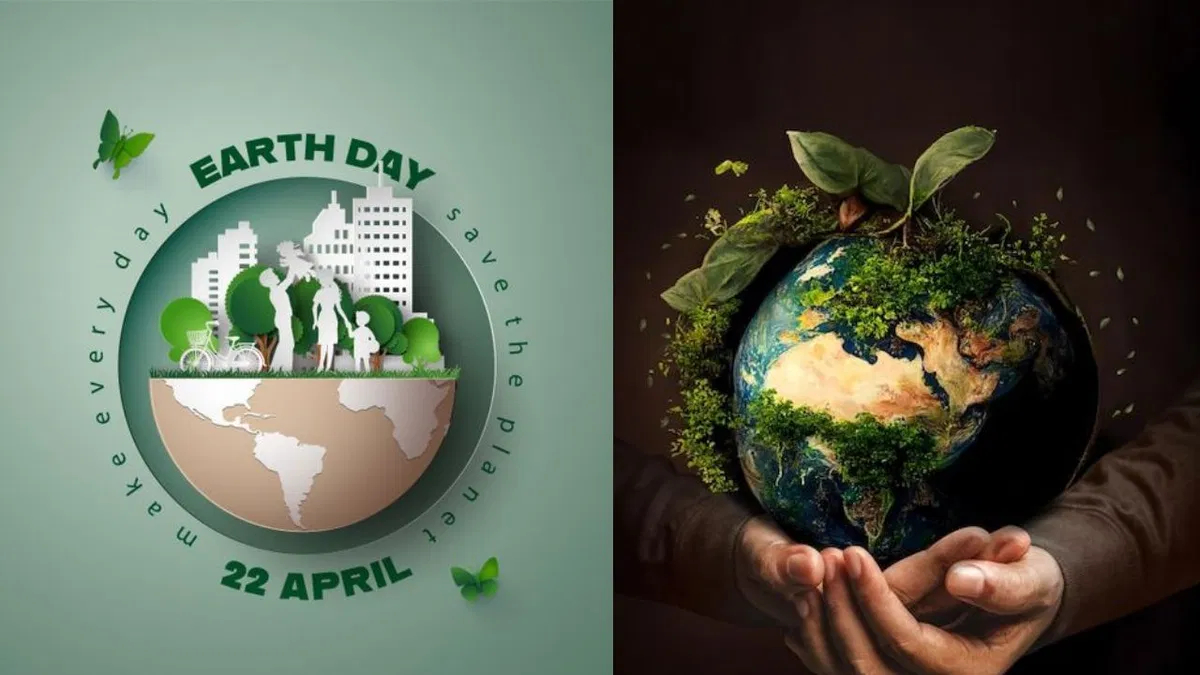
- 22 Apr 2024
Why is it in the News?
On World Earth Day 2024, a global network promoting local food and traditional cooking has called for practical measures to cut down on plastic use in the food chain and to safeguard the environment.
About World Earth Day:
- World Earth Day, also known as International Mother Earth Day, is a globally recognized event dedicated to raising awareness and promoting the sustainability of our planet.
- Earth Day is celebrated on April 22 in the United States and on either April 22 or the day the spring equinox occurs throughout the rest of the world.
- Theme: The theme for World Earth Day 2024 is “Planet vs Plastics”.
- The theme aims to bring attention to the serious issue of plastic pollution and how it harms nature.
Earth Day History:
- The origin of Earth Day can be traced back to 1970.
- The idea behind the event originated from Gaylord Nelson, a US senator, and Denis Hayes, a Harvard student.
- They were both deeply disturbed by the deteriorating environment in the United States and the massive January 1969 oil spill in Santa Barbara, California.
- Deeply disturbed by the environmental impacts, Gaylord Nelson wanted to infuse the energy of student protests into an emerging public consciousness about air and water pollution.
- He recruited Denis Hayes, a young activist, to manage the campus teach-ins and to scale the idea of environment conservation to a broader public.
- They choose April 22, a weekday between Spring Break and Final Exams, to increase student participation.
- Its immediate success was evident with a massive turnout of 20 million people across the US.
- By 1990, Earth Day became a global event transcending national borders.
Earth Day Significance:
- Earth Day symbolizes the need to protect our mother nature.
- The day encourages every individual to think about environmental conservation and act accordingly.
- It speaks about the need to reduce carbon footprints, conserve natural resources, and protect wildlife and natural habitats.
- The day also serves as a platform to advocate for policy changes that can have a positive impact on the environment.
Ethylene Oxide
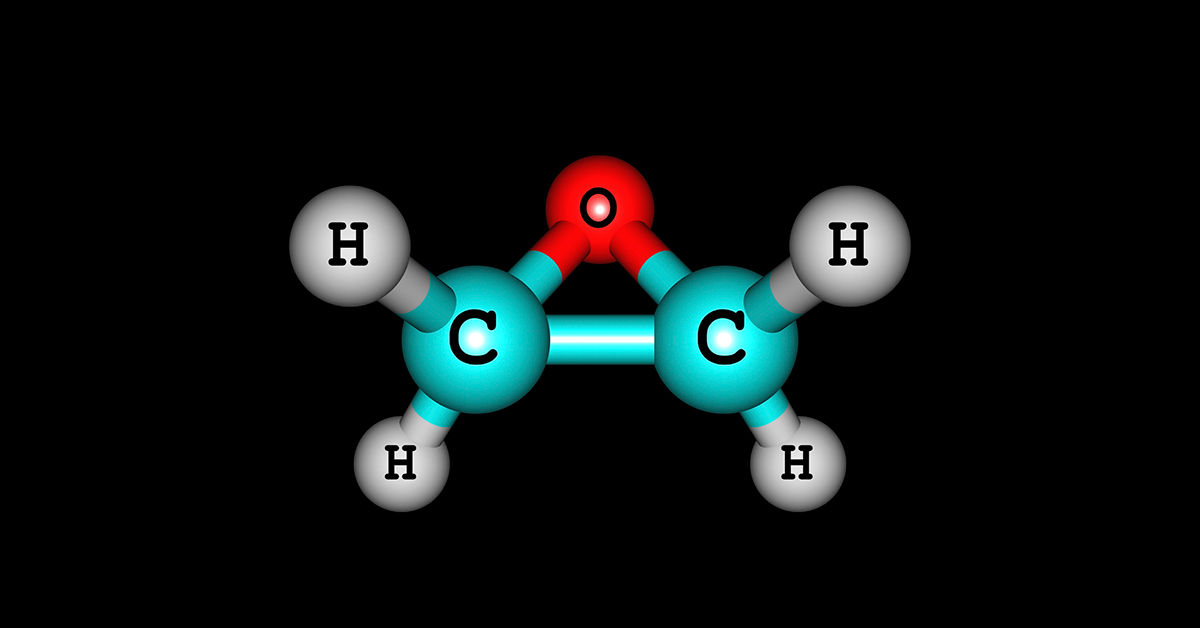
- 20 Apr 2024
Why is it in the News?
The Singapore Food Agency (SFA) has issued a recall on Indian spice brand Everest’s fish curry masala after detecting an ‘excessive’ amount of ethylene oxide–a pesticide–in it.
What is Ethylene Oxide?
- Ethylene oxide is a colorless and flammable gas with a slightly sweet odor and It dissolves easily in water.
- It is widely used in various industries due to its versatile properties.
- Its primary applications include the production of other chemicals, such as ethylene glycol for antifreeze and polyester, as well as the sterilization of medical equipment.
- It also has minor applications in agriculture.
- In this sector, it's used as a fumigant to control insect pests in stored agricultural goods, such as food commodities, to protect them from infestation.
- This usage makes up less than 1% of its applications, and it is combined with other gases to minimize potential toxicity to humans and the environment.
- While ethylene oxide plays a significant role in many industrial processes, it also poses health risks to those exposed to it.
- Potential health effects range from mild symptoms like headaches, nausea, and respiratory issues, to more severe problems such as cancer and reproductive harm.
- To minimize exposure risks, industries and facilities that use ethylene oxide are subject to environmental regulations and required to implement safety measures.
- These measures include emission-reducing and monitoring devices, on-site testing, site-specific operating parameters, and regular reporting and record-keeping.
- Despite these precautions, workers in factories that produce or use ethylene oxide, as well as people living near these facilities, may still face potential health risks.
How Do Pesticides Harm Our Bodies if Present in Food?
- Pesticides, designed to ward off unwanted organisms in agriculture, can pose extensive risks to human health if they find their way into our food chain.
- Even a brief exposure to some of them can cause acute poisoning and symptoms, including diarrhea, dehydration, and skin irritation.
- Some insecticides like Resmethrin, Cypermethrin, and Fenvalerate have been connected to chronic health issues, which include reproductive complications, immune system disruption, pores, and skin infection, and interference with the endocrine system.
- Even low-level exposure over the years can cause critical health implications.
How Long-term Issues Can be Combated?
- Some steps can be taken to mitigate the risks associated with pesticides and ethylene oxide exposure.
- It’s critical to prevent the runoff of insecticides into storm drains, which can contaminate water sources.
- While using insecticides, it’s essential to consider the characteristics of the application site to minimize unintended exposure.
- Attention to the geological factors and groundwater depth can prevent pesticide seepage into water reservoirs.
- By implementing these measures and maintaining strict regulations, we can minimize the health risks posed by these chemical substances.
Salas y Gómez
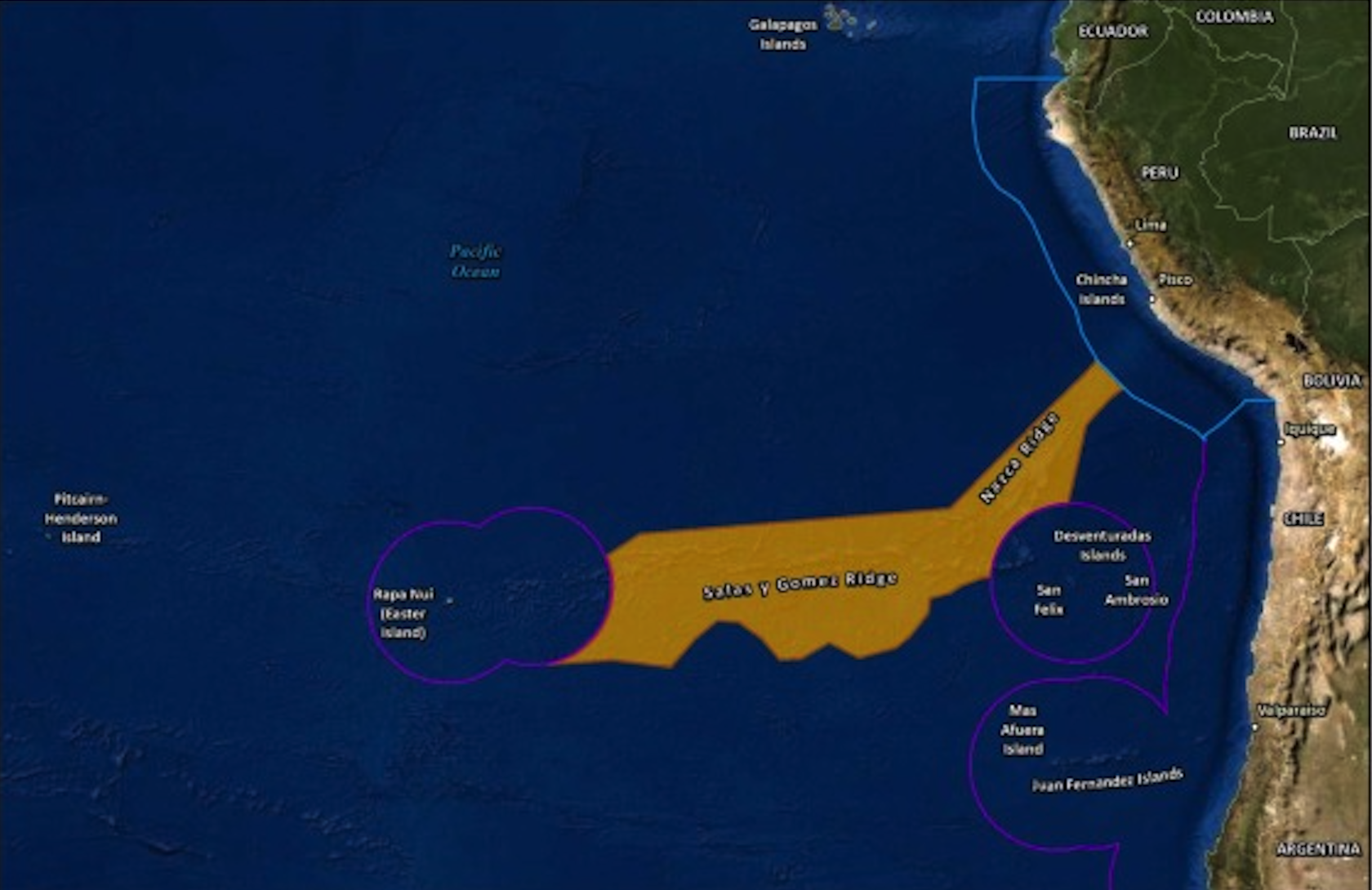
- 20 Apr 2024
Why is it in the News?
An international team of scientists last week announced they discovered 160 species when exploring 10 seamounts and two islands on the 2,900-kilometre-long ocean ridge Salas y Gómez.
What is ‘Salas y Gomez’?
- Salas y Gómez is a remarkable underwater mountain chain in the Southeastern Pacific Ocean.
- This 2,900-kilometer-long range stretches in a west-east orientation, connecting the East Pacific Rise and the Nazca Ridge.
- The western end of the chain lies within Chile's Exclusive Economic Zone near the Easter Islands, while the eastern part extends into areas beyond national jurisdiction and touches upon the national waters of Chile and Peru.
- The region is characterized by unique ecosystems isolated by the Atacama Trench, the Humboldt Current System, and an extreme oxygen minimum zone.
- Salas y Gómez and Nazca ridges are known for their extraordinary biodiversity, hosting some of the highest levels of marine endemism on Earth.
- Given the ecological significance of this underwater mountain range, there is a growing interest in designating Salas y Gómez and its surrounding areas as high-seas marine protected areas upon the ratification of the UN High Seas Treaty.
- This initiative aims to safeguard the region's unique ecosystems and contribute to global marine conservation efforts.
About the United Nations High Seas Treaty:
- The United Nations High Seas Treaty is a legal framework, or a set of legal tools, designed to protect the oceans that are beyond any country’s territory.
- The high seas are defined as the waters that are 200 nautical miles from any national jurisdiction; they are international open waters that all countries can use for marine business such as shipping, fishing, and marine research.
- The treaty’s formal name is the Biodiversity Beyond National Jurisdiction Treaty, or BBNJ Treaty for short.
Key Facts About the High Seas Treaty:
- The treaty was to be negotiated under the United Nations Convention on Laws of the Sea (UNCLOS) of 1982.
- It took 19 years to reach an agreement on it.
- Before now, laws to protect ocean waters and biodiversity beyond countries’ territorial boundaries only protected 1.2% of the high seas.
World Craft Council International
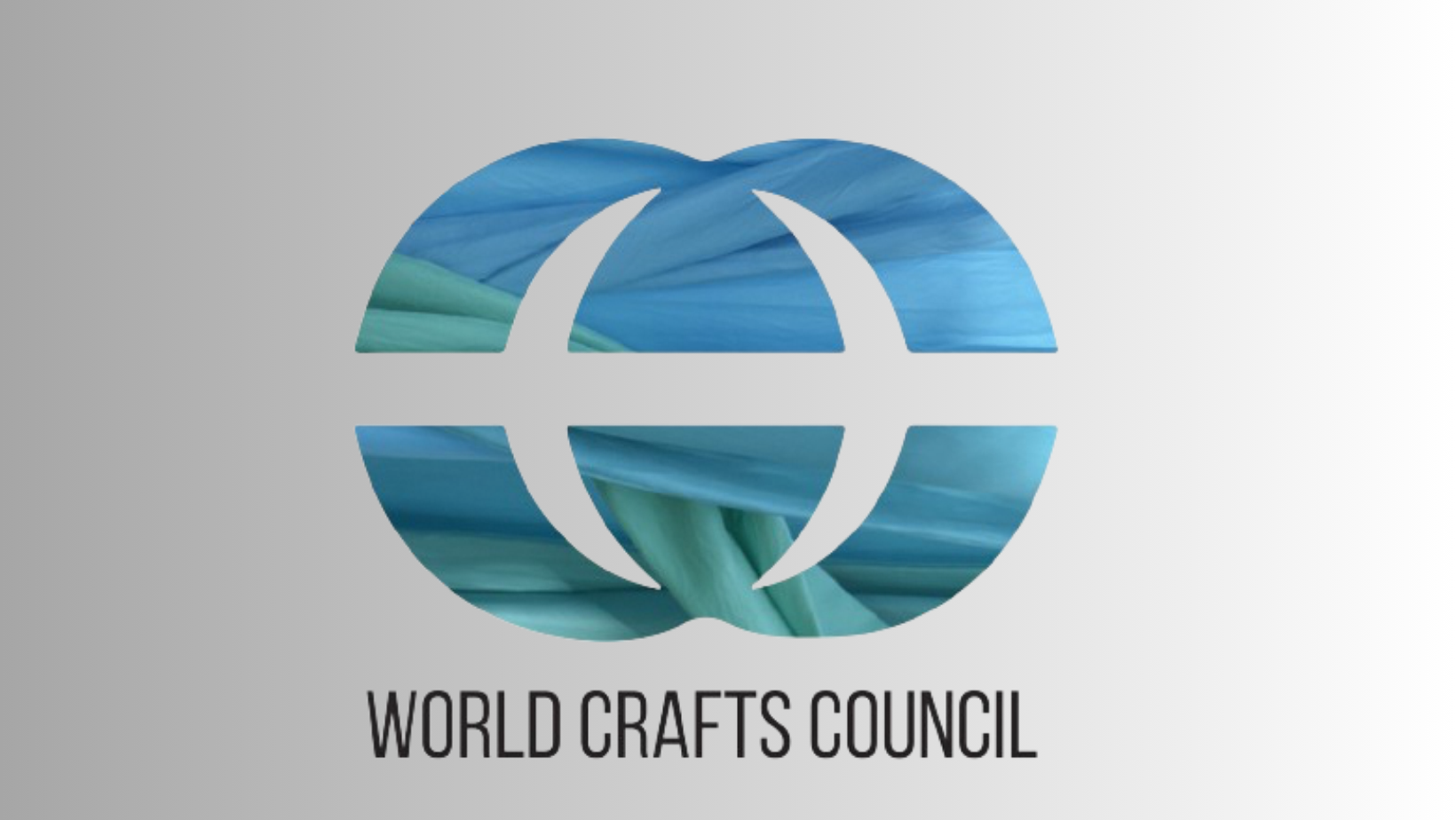
- 20 Apr 2024
Why is it in the News?
The World Crafts Council International (WCCI), a Kuwait-based organization working on the recognition and preservation of traditional crafts across the globe, has picked Srinagar for mapping its craft clusters before its final nomination as the World Craft City (WCC) from India this year.
About World Crafts Council:
- World Crafts Council AISBL is an international non-profit organization dedicated to fostering the preservation, promotion, and advancement of global craftsmanship and traditional crafts.
- It was founded by Ms. Aileen Osborn Vanderbilt Webb, Ms. Margaret M. Patch, and Smt Kamaladevi Chattopadhyay at the 1st World Crafts Council General Assembly in New York on June 12, 1964.
- Since its inception, the World Crafts Council AISBL has been affiliated with UNESCO under Consultative Status for many years.
- Its mission is to empower artisans, celebrate cultural diversity, and contribute to sustainable development by supporting the rich tapestry of global craftsmanship and preserving languishing crafts from extinction.
- Headquarters: The current headquarters for the term (2021-2024) is located in Kuwait.
Objectives:
- The main objective of the World Crafts Council AISBL is to strengthen the status of crafts in cultural and economic life.
- The Council aims to promote fellowship among craftspersons by offering them encouragement, help, and advice.
- It fosters and assists cultural exchange through conferences, international visits, research studies, lectures, workshops, exhibitions, and other activities.
- The WCC also seeks to foster wider knowledge and recognition of the craftspeople's work with due regard to the diversified cultural and national backgrounds and traditions of its members.
- In carrying out these principles, the Council shall consult with governments, national and international institutions, societies, and individuals.?
India has only 3 cities designated as World Craft City:
- Mysuru (Kinnal paintings, Sandalwood carvings, Rosewood Inlay, etc.)
- Mamallapuram (Stone Carving continuing since the Pallava dynasty (275 CE to 897 CE)
- Jaipur (Kundan Jadai (Gem setting), Meenakari Jewellery, Lac-based craft, Gotta Patti Work, etc.)
About the World Craft City Programme:
- The World Craft City Programme, initiated in 2014 by the World Crafts Council AISBL (WCC-International), recognizes the significance of local authorities, artisans, and communities in global cultural, economic, and social advancement.
- By establishing a vibrant network of craft cities worldwide, it embraces the ideals of the creative economy and acknowledges the valuable contributions of local entities to comprehensive development.
- Notably, Jaipur (Rajasthan), Mamallapuram (Tamil Nadu), and Mysore have already been designated as craft cities under this initiative in India.
National Curriculum for Early Childhood Care and Education 2024
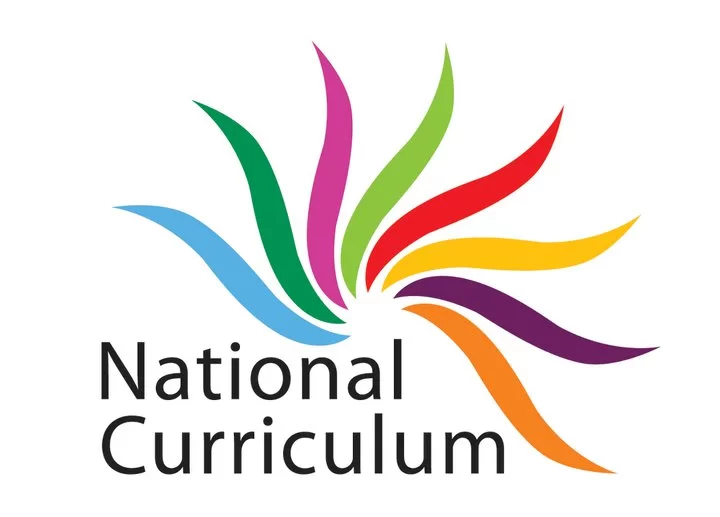
- 20 Apr 2024
Why is it in the News?
For the first time ever, the Central government has released a curriculum advisable to be taught to children aged three to six years old, thus giving an impetus to pre-school learning in 14 lakh anganwadis across the country.
About National Curriculum for Early Childhood Care and Education 2024:
- The National Curriculum for Early Childhood Care and Education 2024 introduces Aadharshila, a comprehensive 48-week curriculum tailored for children aged three to six years attending anganwadis.
- Developed through collaboration among the Ministry of Women and Child Development, the Ministry of Health and Family Welfare, the Department of School Education and Literacy, the Ministry of Education, the NCERT, the Institute of Home Economics at Delhi University, and civil society organizations, Aadharshila serves as a foundational learning framework.
??Key Features:
- The curriculum introduces a weekly play calendar, initiating with four weeks of academic activities facilitating the transition from home to Anganwadi centers through engaging play.
- Over the subsequent 36 weeks, children engage in diverse activities such as storytelling, rhymes, arts, and crafts, fostering exploration, free play, conversation, creation, and appreciation.
- Storytelling themes promote values like conflict resolution, responsibility, and cooperation.
- Children delve into topics including colors, shapes, numbers, senses, family, and friends, enhancing skills in listening, following instructions, counting, and recognizing sounds, alongside exploring themes like seasons and festivals.
- The final eight weeks focus on reinforcing previous learnings through worksheets and performance observation.
- Activities and timetables are age-specific, with detailed material requirements, variations, teacher notes, curricular goals, and competency assessments.
- The curriculum spans three years, targeting at least 48 weeks of learning, fostering skills crucial for Grade 1 transition such as listening, vocabulary, imagination, and social development.
- Special provisions ensure screening, inclusion, and referrals for children with disabilities in all activities.
- The national framework lays the foundation for states to develop culturally relevant curricula, addressing future schooling challenges effectively.
Vasuki Indicus
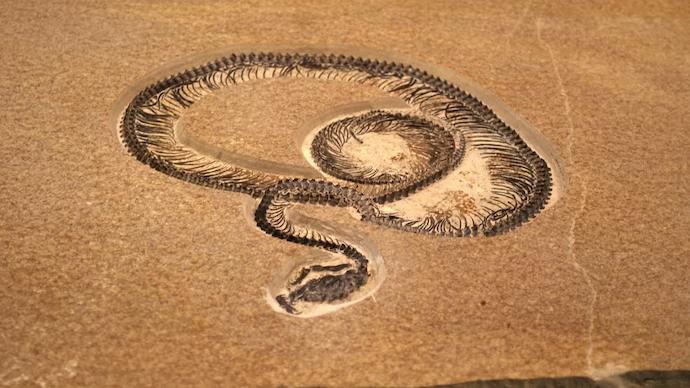
- 20 Apr 2024
Why is it in the News?
Fossils recovered from Kutch in Gujarat may have belonged to the spine of one of the largest snakes to have ever lived, according to new research from the Indian Institute of Technology Roorkee.
Highlights of the Vasuki Indicus Discovery:
- A nearly 50-foot-long snake species, one of the longest and largest in recorded history, once existed in the Indian subcontinent.
- The reptile, Vasuki indicus, lived in India nearly 47 million years ago, fossil remains found from Gujarat’s Panandhro Lignite Mine in Kutch suggest.
- This giant snake, named Vasuki indicus, is estimated to have reached 15 meters in length, exceeding even a T-Rex.
- Scientists found 27 vertebrae, some even in their original position within the spine. They believe Vasuki resembled a large python and lacked venom.
- The species was given the specific name of Vasuki indicus in acknowledgment of the country of its origin, India.
- Vasuki is revered as the king of the snakes in Hindu mythology and is worshiped on special days like Nag Panchami.
About Vasuki Indicus:
- Vasuki indicus belongs to the Madtsoiidae family, and thrived during a “warm geological interval".
- Researchers suggest that the warm tropical temperatures of Gondwanaland, averaging around 28°C, may have contributed to the substantial size and growth of this giant reptile.
- There is a recognized correlation suggesting that higher ambient temperatures can enable larger growth in animals.
- Madtsoiids were also found in Europe and Africa, besides Asia.
- Vasuki indicus represents a large lineage of Madtsoiidae that originated in the Indian subcontinent and then spread to southern Eurasia, before reaching North Africa around 50 million years ago, that’s nearly 15 million years after the dinosaurs went extinct.
- Madtsoiidae, an extinct lineage of terrestrial snakes, thrived on the Indian subcontinent over a span of approximately 100 million years, from the Late Cretaceous to the Late Pleistocene, dating from roughly 98 million to 11,000 years ago.
- During the Late Cretaceous period, the supercontinent Pangea had fragmented into two major landmasses:
- Laurasia, encompassing North America, Europe, and Northern Asia to the north; and
- Gondwanaland to the south, which included present-day Africa, Antarctica, South America, Australia, and the Indian subcontinent.
- The fossils of Vasuki indicus extracted from the early Lutetian grey shale layers of the Naredi Formation at the Kutch mine include an “excellently preserved, partial vertebral column”.
- The discovery sheds light on the biogeographic patterns of dispersion and diversification within the Madtsoiidae, particularly across the Gondwanan continents.
- The presence of this giant snake in the Eocene of India indicates a complex history of faunal exchanges between the Indian subcontinent and other landmasses prior to complete integration into the Eurasian plate.
Coral Bleaching
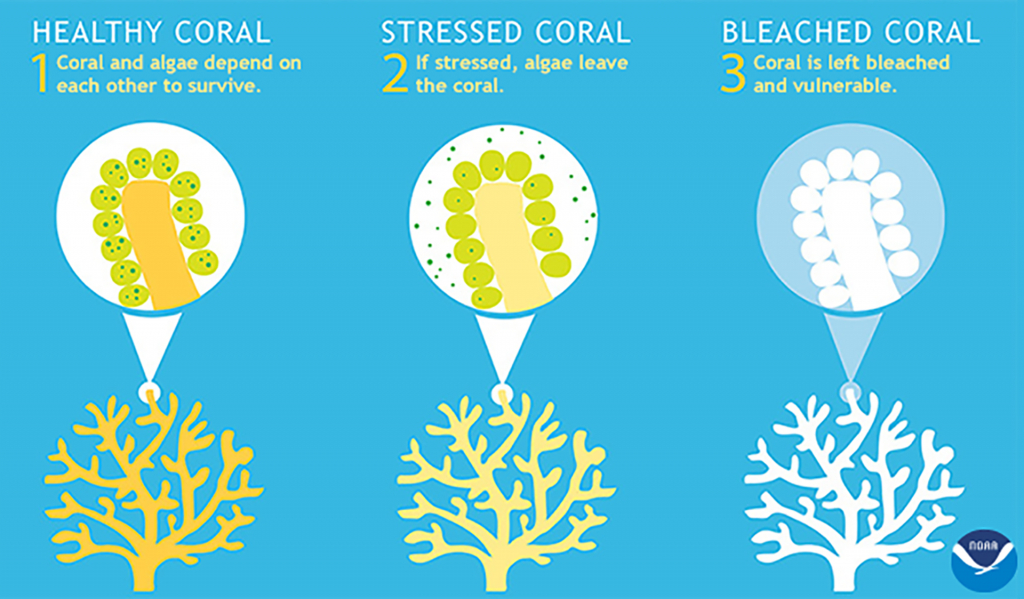
- 19 Apr 2024
Why is it in the News?
The fourth global mass coral bleaching event has been triggered by extraordinary ocean temperatures, the US National Oceanic and Atmospheric Administration (NOAA) said recently.
What are Corals and Coral Reefs?
- Corals are essentially animals, which are sessile, meaning they permanently attach themselves to the ocean floor.
- They use their tiny tentacle-like hands to catch food from the water and sweep it into their mouth.
- Each individual coral animal is known as a polyp and it lives in groups of hundreds to thousands of genetically identical polyps that form a ‘colony’.
- Corals are largely classified as either hard coral or soft coral.
- It is the hard corals that are the architects of coral reefs — complex three-dimensional structures built up over thousands of years.
- Unlike soft corals, hard corals have stony skeletons made out of limestone that are produced by coral polyps.
- When polyps die, their skeletons are left behind and used as foundations for new polyps.
- Coral reefs, also referred to as “rainforests of the sea”, have existed on the Earth for nearly 450 million years.
- Australia’s Great Barrier Reef is the largest in the world, stretching across 2,028 kilometers.
What is the Significance of Corals?
- Coral reefs have a crucial role in marine ecosystems.
- Thousands of marine species can be found living on one reef.
- For instance, “the Great Barrier Reef contains over 400 coral species, 1,500 fish species, 4,000 mollusc species and six of the world’s seven sea turtle species”.
- Research has shown that there could be millions of undiscovered species of organisms living in and around reefs.
- These massive structures also provide economic goods and services worth about $375 billion each year.
- More than 500 million people across the world depend on coral reefs for food, income, and coastal protection from storms and floods.
- Coral reefs can absorb up to 97% of the energy from waves, storms, and floods, which prevents loss of life, property damage, and soil erosion.
- Therefore, the absence of coral reefs would not only result in severe ramifications for marine life but also for humans.
What is Coral Bleaching?
- Most corals contain algae called zooxanthellae ( plant-like organisms) in their tissues.
- Corals and zooxanthellae have a symbiotic relationship.
- While corals provide zooxanthellae a safe place to live, zooxanthellae provide oxygen and organic products of photosynthesis that help corals to grow and thrive.
- Zooxanthellae also give bright and unique colors to corals.
- Corals are very sensitive to light and temperature and even a small change in their living conditions can stress them.
- When stressed, they expel zooxanthellae and turn entirely white.
- This is called coral bleaching.
- Coral bleaching doesn’t immediately lead to the death of corals.
- They rather go under more stress and are subject to mortality.
- Coral bleaching reduces the reproductivity of corals and makes them more vulnerable to fatal diseases.
- If the bleaching is not too severe, corals have been known to recover.
- Global mass bleaching of coral reefs is when significant coral bleaching is confirmed in the Atlantic, Indian, and Pacific oceans.
- Such events are a relatively new phenomenon.
- The first one took place in 1998 in which 20% of the world’s reef areas suffered bleaching-level heat stress.
- The next two global bleaching events occurred in 2010 (35% of reefs affected) and between 2014 and 2017 (56% of reefs affected).
What can be the impact of the event?
- As the global mass bleaching event is still unfolding, its full impact will not be known for a while.
- With global temperatures soaring, such events are expected to become more frequent and longer.
- As a result, the world may lose the vast majority of its coral reefs at 1.5 degrees Celsius of warming, and virtually all at 2 degrees.
- Currently, the average global temperature of the Earth has increased by at least 1.1 degree Celsius since 1850.
- To curb global warming to no more than 1.5 degrees Celsius, countries need to bring GHG emissions to a net zero by 2050, according to the Paris Agreement.
The goal, however, is unlikely to be achieved as record levels of GHG emissions have continued to be emitted into the atmosphere.
Mount Ruang
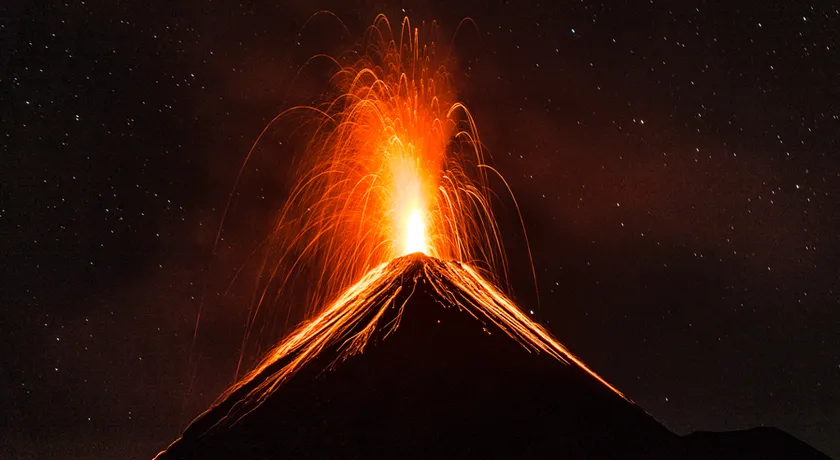
- 19 Apr 2024
Why is it in the News?
A remote volcano in Indonesia’s outermost region erupted again on April 19 after the crater threw up columns of smoke and lava multiple times this week and forced thousands to evacuate.
About Mount Ruang:
- Mount Ruang is an active stratovolcano located in the Sangihe Islands arc, North Sulawesi, Indonesia.
- It is the southernmost volcano in the region, situated on an island that measures 4 by 5 kilometers wide.
- The summit features a partial lava dome and reaches an altitude of 725 meters.
- Mount Ruang has experienced multiple eruptions throughout its history, with the most recent ongoing eruption starting on April 18, 2024.
- The volcano's eruptions often generate ash columns, lava flows, and gas emissions, posing risks to nearby communities.
What is a Stratovolcano?
- A stratovolcano is a tall volcano shaped like a cone, formed by various layers of materials such as volcanic ash, hardened lava, pumice, and tephra.
- Stratovolcanoes are steep and have periodic explosive and effusive eruptions, although some have calderas, which are collapsed craters.
- The highly viscous lava that flows from this type of volcano cools and hardens and in turn, does not spread far.
- The magma that forms this lava is generally felsic.
- Stratovolcanoes are more common than shield volcanoes.
- One of the famous stratovolcanoes is Vesuvius which destroyed Herculaneum and Pompeii in 79 CE.
Formation Of Stratovolcanoes:
- Stratovolcanoes occur mostly in subduction zones, where the oceanic crust slides under continental crust.
- The descent of the oceanic plate causes the release of trapped water from hydrated minerals and porous rock, into the mantle rock in the area above the oceanic slab.
- This process occurs at different pressures depending on the minerals.
- The water lowers the mantle rock’s melting point, causing partial melting and its rise to the lithosphere forming a temporary pool.
- The magma then continues to rise through the crust collecting rock rich in silica.
- The magma finally pools in the magma chamber which is either within or under the volcano.
- The low pressure at this point causes the volatile compounds such as water, carbon dioxide, and sulfur dioxide dissolved in the magma to escape.
- When the magma and gas accumulate to a critical level, they overcome the rock blockage of the volcanic cone and erupt violently.
Global Alliance for Incinerator Alternatives (GAIA)
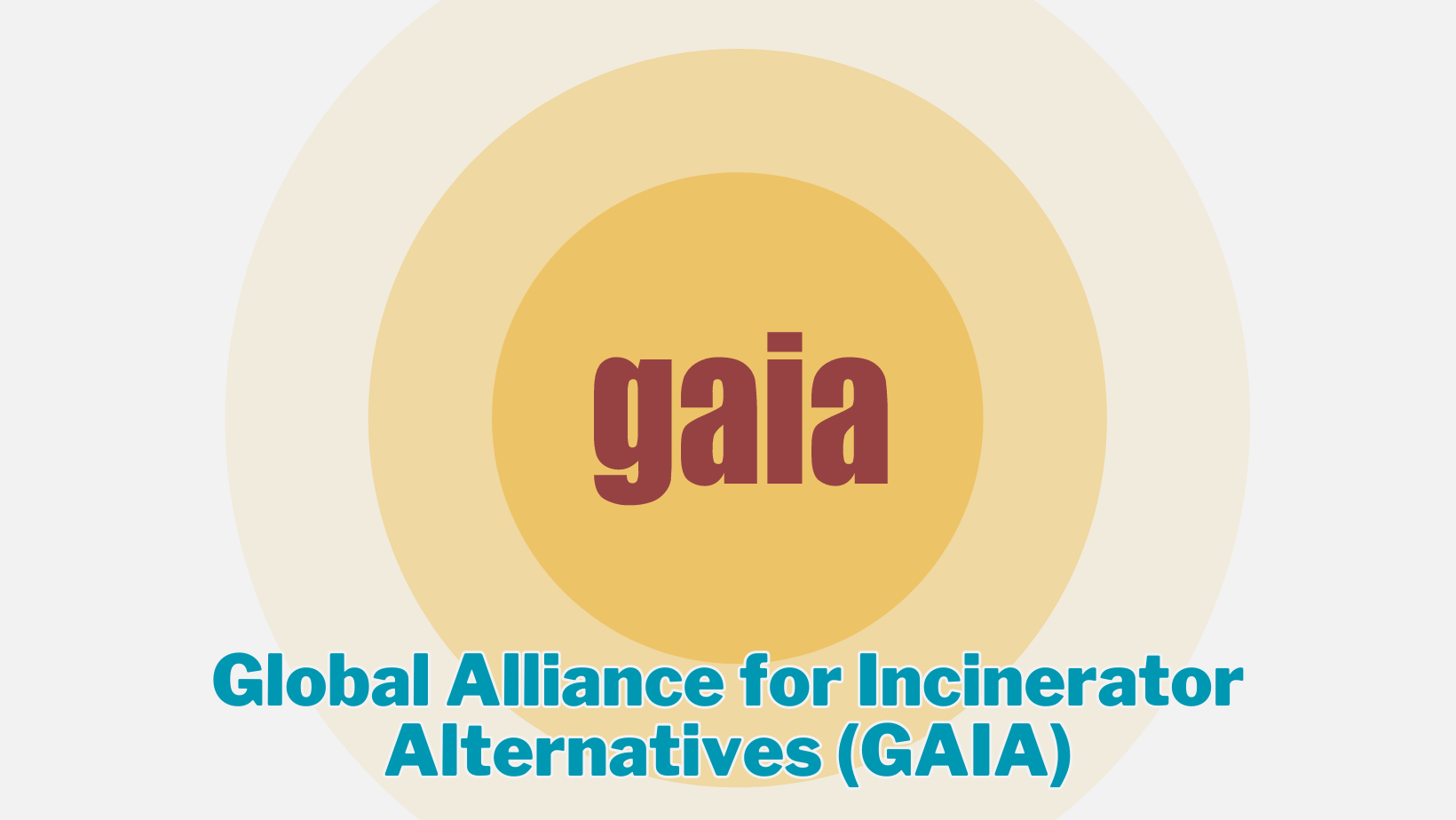
- 19 Apr 2024
Why is it in the News?
The Global Alliance for Incinerator Alternatives (GAIA) Asia Pacific, in collaboration with other environmental organizations, has called on the Association of Southeast Asian Nations (ASEAN) to take decisive action in response to plastic pollution.
About Global Alliance for Incinerator Alternatives (GAIA):
- The Global Alliance for Incinerator Alternatives (GAIA) is an alliance of over 1,000 grassroots groups, NGOs, and individuals working towards a transition from a linear, extractive economy to a circular system.
- GAIA's primary objective is to create a world that prioritizes people's right to a safe and healthy environment, free from toxic pollution and resource depletion.
- GAIA envisions a just, zero-waste world where communities' rights are respected, and ecological limits are acknowledged. To achieve this vision, the alliance focuses on:
- Eliminating Incineration: GAIA advocates for alternatives to incineration and promotes waste management practices that protect the environment and public health.
- Promoting Zero Waste: The alliance supports the adoption of zero-waste strategies, emphasizing waste reduction, reuse, and recycling to conserve resources and reduce pollution.
- Addressing Plastic Pollution: GAIA recognizes the global plastic pollution crisis and works on initiatives to reduce plastic waste and promote sustainable alternatives.
- Mitigating Climate Change: GAIA advocates for climate-friendly waste management practices, emphasizing the importance of reducing greenhouse gas emissions from waste disposal.
What is Incineration?
- Incineration is a waste treatment process that involves burning hazardous materials at high temperatures to destroy contaminants.
- This process takes place in an "incinerator," a furnace specifically designed to safely burn hazardous materials within a combustion chamber.
- Various types of hazardous materials can be treated through incineration, including soil, sludge, liquids, and gases.
- While incineration effectively destroys many harmful chemicals such as solvents, polychlorinated biphenyls (PCBs), and pesticides, it does not destroy metals like lead and chromium.
- Modern incinerators are equipped with air pollution control mechanisms, such as fabric filters, scrubbers, and electrostatic precipitators.
- These technologies help remove fly ash and gaseous contaminants generated during the incineration process, mitigating its environmental impact.
- Despite its benefits in waste treatment, incineration remains a topic of debate due to concerns about residual pollutants and the potential for contributing to greenhouse gas emissions.
Wigner Crystals

- 19 Apr 2024
Why is it in the News?
In new peer-reviewed research, physicists from Princeton University have confirmed that electrons don’t even need atoms to party together.
What are Wigner Crystals?
- Wigner Crystals are composed entirely of electrons, unlike the common crystals which are formed by atoms or molecules.
- These negatively charged particles, which are known for their role in electricity and chemical bonding, can, under specific circumstances, arrange themselves into a lattice structure, creating a crystal made purely of electrons.
- The conditions required for the formation of Wigner Crystals are quite stringent.
- They occur at very low electron densities, where the repulsive Coulomb forces between the electrons dominate over their kinetic energy.
- This means that the electrons must be spread out enough so that their mutual repulsion causes them to settle into a fixed pattern, minimizing their potential energy.
- The discovery was made possible by cooling a two-dimensional electron system to near absolute zero and reducing the electron density to a critical level.
- Under these conditions, the electrons crystallized into a lattice, much like the atoms in a solid.
- The visualization of this electron lattice marks a monumental step in our understanding of the quantum phases of matter.
- The implications of this discovery are profound.
- Wigner Crystals could provide insights into the behavior of electrons in low-density environments, such as those found in semiconductors and other electronic materials.
- This could lead to the development of new technologies and materials with unique electronic properties.
- Moreover, the study of Wigner Crystals could shed light on other exotic states of matter and the fundamental principles of quantum mechanics.
- The confirmation of Wigner Crystals underscores the importance of theoretical physics and how ideas that once seemed purely speculative can lead to tangible discoveries.
- The realization of Wigner Crystals opens up a new chapter in the study of condensed matter physics.
- It stands as a bridge between the abstract world of quantum mechanics and the tangible reality of material science.
- As we continue to explore the quantum landscape, Wigner Crystals will undoubtedly play a pivotal role in unraveling the mysteries of the electron and the intricate dance of particles that constitute the fabric of our universe.
Added Sugars/Free Sugars

- 19 Apr 2024
Why is it in the News?
Nestlé’s products for babies in Asia, Africa, and Latin America were found to contain added sugars, while the same products sold in Europe did not have it, according to a recent report.
Highlights of the Report on Nestle:
- A report by the Swiss organization Public Eye titled 'How Nestlé gets children hooked on sugar in lower-income countries' scrutinized Nestlé for employing varying nutritional standards across its products depending on the country, with unclear sugar content labeling.
- The report highlighted Nestlé's Cerelac, the world's largest baby cereal brand, which contains significantly higher sugar levels in markets like India, Ethiopia, and Thailand compared to Germany and the UK.
- Despite sugar not being recommended for infants, Nestlé's baby food products with added sugars are allowed under some countries' national legislation, conflicting with WHO guidelines.
- WHO recommends reducing daily free sugar intake to less than 10% of total energy intake, preferably less than 5% (around 25 grams per person per day), for better health.
- Nestlé India claims to have reduced added sugars by up to 30% in their infant cereals portfolio over the last five years, depending on the variant.
What are Added Sugars?
- Sugar is a simple carbohydrate.
- Some food items have sugar that is naturally occurring.
- It is “found in milk (lactose) and fruit (fructose) or any product that contains milk (such as yogurt, milk, or cream) or fruit (fresh, dried) contains some natural sugars.
- Free sugar or added sugar is added separately to a food item during preparation or processing.
- It can “include natural sugars such as white sugar, brown sugar, and honey, as well as other caloric sweeteners that are chemically manufactured (such as high fructose corn syrup).
Why is Added Sugar Bad?
- Excessive consumption of added sugars poses several health risks.
- Limiting sugar intake is essential for maintaining a healthy diet and preventing various diseases.
The following are some reasons why added sugars can be harmful:
- Poor Nutritional Balance: Consuming too much-added sugar can lead to increased overall energy intake, often replacing nutritionally adequate calories from healthier food sources.
- This results in an unbalanced diet lacking essential nutrients, increasing the risk of malnutrition and other health problems.
- Increased Risk of Non-Communicable Diseases: Excessive sugar consumption is associated with a higher risk of developing non-communicable diseases such as diabetes, obesity, and cardiovascular ailments.
- These diseases can have severe long-term consequences on overall health and well-being.
- Unnecessary for Infants and Children: Adding sugar to foods offered to babies and young children is unnecessary and can be highly addictive, establishing unhealthy eating habits that continue into adulthood.
- Early exposure to sugar is also associated with tooth decay and can contribute to nutrition-based disorders later in life.
Cloud Seeding
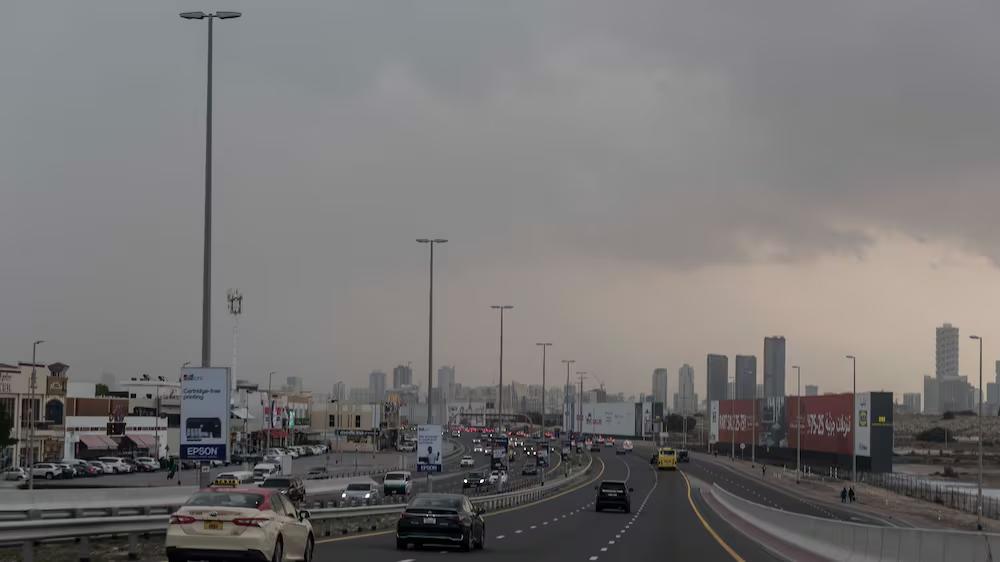
- 18 Apr 2024
Why is it in the News?
The UAE recorded the heaviest rain ever after a severe thunderstorm hit the country on April 15, killing at least one person, causing damage to homes and businesses, and bringing air travel to a standstill in Dubai.
What Led to the Heavy Rains in Dubai?
- The primary reason for these heavy rains was a storm system, which was passing through the Arabian peninsula and moving across the Gulf of Oman.
- According to a different report, rains could have been exacerbated by cloud seeding, a process of spraying salt mixtures in clouds that would result in condensation of the cloud and eventually cause rainfall.
- Several reports quoted meteorologists at the National Center for Meteorology as saying they flew six or seven cloud-seeding flights before the rains.
Is climate change responsible for the event?
- Some experts have suggested that the soaring global temperatures could also be behind the event.
- Higher temperatures cause evaporation of water not only from land but also oceans and other water bodies, meaning a warmer atmosphere holds more moisture.
- Studies have found that for every 1 degree Celsius rise in average temperature, the atmosphere can hold about 7% more moisture.
- This makes storms more dangerous as it leads to an increase in precipitation intensity, duration, and/or frequency, which ultimately can cause severe flooding.
- While the average global temperature on the Earth has increased by at least 1.1 degrees Celsius since 1850, the UAE has witnessed an increase of almost 1.5 degrees Celsius in the past 60 years.
- The increase in temperatures is mainly caused by the rise of heat-trapping greenhouse gas (GHG) emissions since the Industrial Revolution.
- However, it is extremely difficult to attribute any particular extreme weather event to climate change.
- It is because there are multiple factors, like patterns of natural climate variability, such as El Niño and La Niña, that contribute to such events.
What is Cloud Seeding?
- Cloud seeding is a type of weather modification where substances like silver iodide or dry ice are dispersed into clouds to encourage precipitation, such as rain or snow.
- In countries like the UAE, where temperatures are high and annual rainfall is minimal, cloud seeding is employed to alleviate pressure on limited groundwater sources by enhancing precipitation.
What is UAE's cloud seeding programme?
- The UAE initiated its cloud seeding program in the late 1990s, making it one of the first Middle Eastern countries to use this technique.
- Collaborative research with institutions like the National Center for Atmospheric Research (NCAR) and NASA has bolstered their efforts.
How does cloud seeding work?
- Cloud seeding is a technique where “seeding agents" such as silver iodide or salt are introduced into clouds to stimulate condensation and trigger rainfall.
- Weather forecasters monitor atmospheric conditions and identify suitable clouds for seeding based on precipitation patterns.
- This technique can increase rainfall by up to 30-35 percent in clear conditions and 10-15 percent in more humid conditions.
What is the environmental impact of cloud seeding?
- Cloud seeding alters the precipitation patterns of a region/locality.
- This may negatively impact neighboring ecosystems, which were to receive rain for the seeded clouds originally.
- Introducing seeding agents might impact the natural hydrological cycle as it may change the natural soil moisture levels, groundwater recharge, and river flows.
- Some experts worry about the potential for silver toxicity if cloud seeding becomes widespread.
- Silver iodide is a common seeding agent.
- Silver toxicity could pose risks to aquatic life and soil health.
- Therefore, even with the promise cloud seeding holds, responsible stewardship and thorough evaluation of its environmental impacts are crucial.
Green Credit Programme (GCP)

- 18 Apr 2024
Why is it in the News?
The Environment Ministry recently has made significant changes to the Norms of the Green Credit Programme.
What is the Green Credit Programme (GCP)?
- An innovative initiative by the Ministry of Environment, Forest and Climate Change (MoEF&CC).
- Announced under the 'Lifestyle for Environment' (LiFE) movement.
- It aims to establish a market-based mechanism to incentivize voluntary environmental actions by individuals, urban local bodies, communities, and the private sector.
Target Sectors and Stakeholders:
- Designed to encourage voluntary environmental actions across various sectors.
- Engages diverse stakeholders, including individuals, communities, private sector industries, and companies.
Initial Focus Areas:
- Water conservation: Encourages efficient use and management of water resources.
- Afforestation: Promotes tree planting and forest restoration to enhance carbon sequestration and biodiversity.
Programme Implementation:
- The GCP's governance structure is overseen by an inter-ministerial Steering Committee, with the Indian Council of Forestry Research and Education (ICFRE) serving as the program administrator.
- ICFRE manages the implementation, monitoring, and operation of the program.
- A user-friendly digital platform will simplify project registration, verification, and issuance of Green Credits.
- ICFRE, in collaboration with experts, is developing the Green Credit Registry and trading platform to facilitate the registration and trading of Green Credits.
- Entities and individuals must register their activities with the government to earn Green Credits.
- Verification of activities will be conducted by a designated agency, with self-verification available for small projects.
Programme Impact:
- The GCP strives to encourage environmentally beneficial actions by creating tradable green credits through a market-oriented approach.
- These green credits can be traded on a domestic market platform, providing further incentives for positive environmental actions.
- Additionally, if the generation of green credits results in measurable reductions or removals of carbon emissions, they may also qualify for carbon credits.
Programme Adjustments:
- In response to concerns regarding the potential misuse of the GCP for profit-driven tree planting, the government has emphasized the importance of prioritizing ecosystem restoration over mere tree planting.
- Indigenous species will be preferred, and naturally occurring seedlings will be preserved.
- The previous requirement of a minimum of 1,100 trees per hectare to qualify as a reforested area has been revised, with States now tasked to define specific criteria.
- State forest departments will be responsible for the actual implementation of afforestation efforts.
United Nations Entity for Gender Equality and the Empowerment of Women (UN Women)
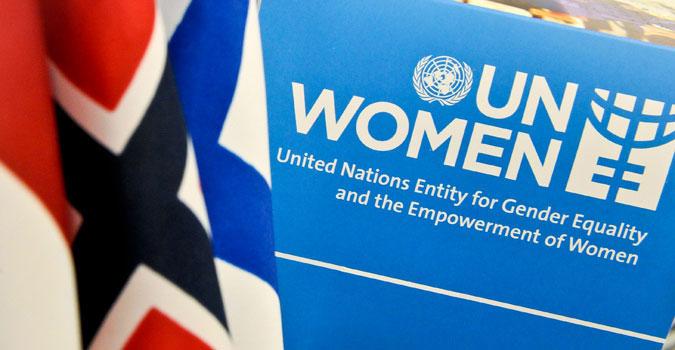
- 18 Apr 2024
Why is it in the News?
According to a recent report by UN Women, six months into the war, Gaza is facing a humanitarian crisis disproportionately impacting women and girls.
What is UN Women?
- Founded in 2010 by the United Nations General Assembly as part of the UN reform agenda.
- Merges resources and mandates to create a more significant impact on gender equality and women's empowerment.
- Serves as a global advocate for women and girls, addressing their needs and accelerating progress.
Key Roles:
- Supports intergovernmental bodies like the Commission on the Status of Women in developing policies, global standards, and norms for gender equality.
- Assists member states in implementing these standards and offers technical and financial support upon request.
- Builds effective partnerships with civil society organizations.
- Leads and coordinates the UN system's work on gender equality while promoting accountability through regular monitoring of progress.
Sustainable Development Goals (SDGs):
- Works globally to realize the SDGs for women and girls.
- Promotes women's equal participation in all aspects of life.
Country-level Support:
- Collaborates with government and non-governmental partners in countries that request assistance.
- Helps implement policies, laws, services, and resources to advance gender equality.
Grant-making Funds:
- Fund for Gender Equality: Provides grants to support innovative, high-impact programs by government agencies and civil society groups.
- UN Trust Fund to End Violence against Women: Finances initiatives that address violence against women and girls.
Commission on the Status of Women (CSW):
- A global policy-making body focused on gender equality and women's advancement.
- Operates as a functional commission of the United Nations Economic and Social Council (ECOSOC).
Information and Advocacy:
- Regularly provides information on women's rights issues to the General Assembly, ECOSOC, and the Security Council.
- Maintains the UN Secretary-General's database on violence against women, tracking measures taken by UN Member States and organizations.
- UN Women plays a vital role in advancing gender equality and women's empowerment worldwide by providing crucial support, resources, and advocacy through its various initiatives and collaborations.
Submersible Platform for Acoustic Characterisation and Evaluation (Space)
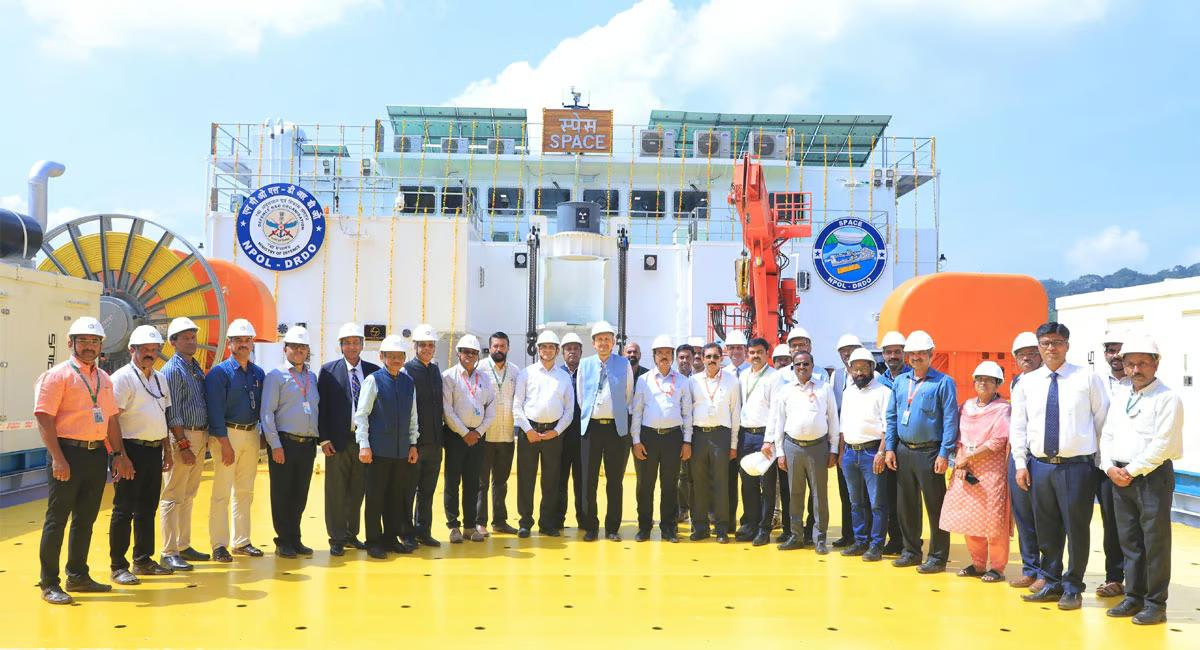
- 18 Apr 2024
Why is it in the News?
A state-of-the-art Submersible Platform for Acoustic Characterisation and Evaluation (Space) was inaugurated by Secretary, Department of Defence (R&D) and DRDO Chairman Samir V Kamat at Underwater Acoustic Research Facility, Kulamavu in Idukki district of Kerala recently.
About Submersible Platform for Acoustic Characterisation and Evaluation (SPACE):
- Developed by the Naval Physical & Oceanographic Laboratory of the Defence Research and Development Organisation (DRDO), SPACE is a premier testing and evaluation hub for sonar systems used by the Indian Navy across various platforms, including ships, submarines, and helicopters.
Key Features:
- Two primary components:
- A floating platform on the water's surface and
- A submersible platform that can be lowered up to 100 meters using winch systems.
- Facilitates quick deployment and recovery of scientific packages like sensors and transducers.
- Suitable for surveying, sampling, and data collection of air, surface, mid-water, and reservoir floor parameters using advanced scientific instrumentation.
- Well-equipped scientific laboratories cater to data processing and sample analysis requirements.
Uses:
- Evaluating complete sonar systems, enhancing research capabilities in Anti-Submarine Warfare.
- SPACE enables researchers to explore innovative solutions for underwater acoustic challenges, improve naval capabilities, and ensure the security of Indian waters.
What is Sonar?
- SONAR, which stands for Sound Navigation And Ranging, is a technology that uses sound waves to detect, locate, and map objects underwater.
- It operates on the principle of echolocation, similar to how bats and dolphins use sound to navigate and find their prey.
- The Sonar system consists of a transmitter, a receiver, and a display.
- The transmitter sends out sound waves, which travel through water and reflect off objects in their path.
- These reflected waves, or echoes, are then received by the receiver.
- By measuring the time it takes for the echoes to return and the strength of the received signal, the system can determine the distance, direction, size, and shape of the underwater object.
Sonar has various applications, including:
- Maritime navigation: Commercial ships and submarines use sonar to navigate through unfamiliar waters, avoid obstacles, and create underwater maps.
- Military applications: Sonar plays a crucial role in military operations for detecting and tracking enemy submarines, underwater mines, and other threats.
- Fishing and underwater research: Sonar helps fishermen locate schools of fish and is also used by scientists and researchers to study marine life, underwater topography, and archaeological sites.
Iron Age Archaeological Sites Discovered in Telangana
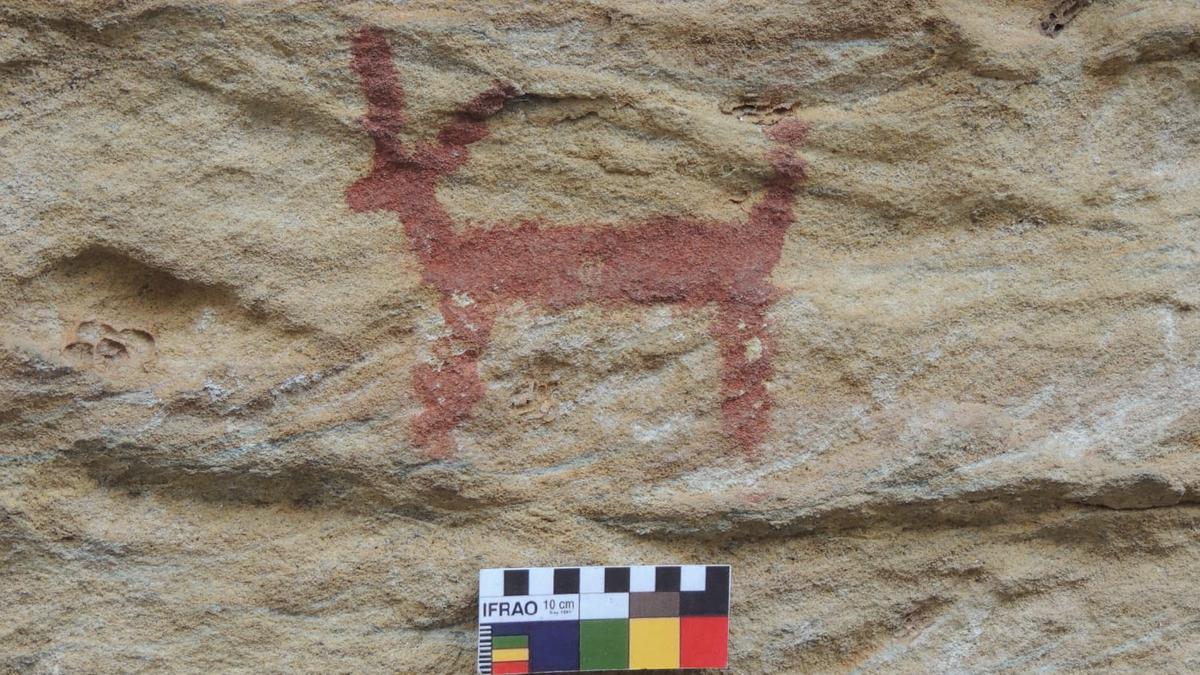
- 18 Apr 2024
Why is it in the News?
A team of archaeologists claimed to have discovered a unique Iron Age megalithic site at Ooragutta near Bandala village in SS Tadvai mandal of Mulugu district, Telangana.
Recent Archaeological Discoveries in Telangana:
Ooragutta Iron Age Megalithic Site:
- Situated near Bandala village, SS Tadvai Mandal, Mulugu district, and boasts over 200 megalithic structures dating back to 1,000 BCE.
- Notable for its 'Dolmenoid Cists' featuring cap-stone-shaped side slabs, a rarity in India.
- Resembles European 'Passage Chambers', possibly influencing the design of squarish and rectangular monuments.
Rock Art Sites at Damaratogu:
- Two new sites were discovered in Gundala mandal of Bhadradri Kothagudem district.
- 'Devarlabanda Mula' site contains animal depictions, possibly dating back to the Mesolithic Age (8,000 - 3,000 BCE).
- No weapons or domestic animals are shown, suggesting the paintings may be from a pre-agricultural era.
About the Iron Age:
Timeframe:
- Began between 1200 BCE and 600 BCE, following the Stone Age and Bronze Age.
- Spanned across Africa, Europe, and Asia during prehistoric times in the Old World.
Discovery and Use of Iron:
- Iron replaced bronze as the preferred choice of metal in metalworking.
- First discovered in Turkey before spreading to other European countries.
- Used for making strong tools, enhancing agriculture through the development of the iron plow, and creating powerful weapons for armies.
Technological Advancements:
- Construction of large forts, bridges, and deep mines to extract valuable minerals.
- Improvements in pottery and weaving techniques.
Social and Political Impacts:
- Rulers gained significant power through the use of iron weapons and the ability to conquer other lands.
- The transition from prehistory to history as writing became widespread, marking the end of the Iron Age.
- Iron remains popular for various applications today, such as tools, building materials, and machinery.
- The Iron Age was a transformative period in human history, characterized by the discovery of iron, advancements in technology, and shifts in social and political structures. The use of iron revolutionized agriculture, warfare, and everyday life, leaving a lasting impact on human civilization.
B virus
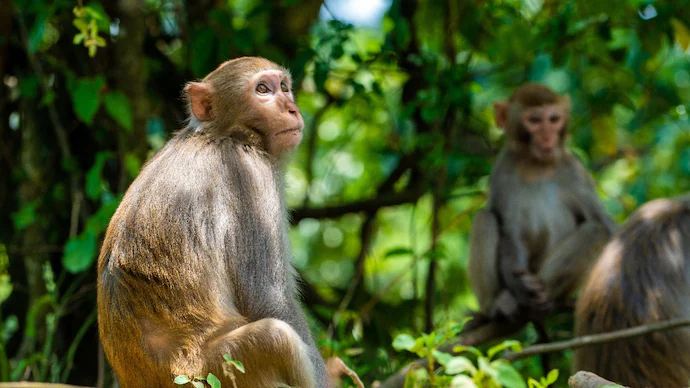
- 17 Apr 2024
Why is it in the News?
A 37-year-old man wounded by a wild monkey in Hong Kong is in intensive care suffering from infection with B virus.
What is B virus?
- B virus, also known as herpes B virus or Macacine herpesvirus 1 (McHV-1), is a type of herpesvirus found in macaque monkeys, particularly rhesus macaques.
- While asymptomatic in these animals, it can cause severe neurological complications, including encephalitis, in humans if transmitted through bites, scratches, or contact with infected bodily fluids.
Is B virus infection fatal??
- B virus infections in humans are rare but potentially fatal, with symptoms ranging from fever and headache to neurological dysfunction and death.
- Of the 50 cases reported in the US, 21 have died.
- Prompt treatment with antiviral medication is essential if exposure to B virus occurs, and preventive measures are crucial for individuals working with or handling macaques.
How does it spread??
- The transmission of this virus among humans is rare.
- So far, only one case of human-to-human transmission has been recorded.
What are the symptoms of B virus infection??
- Disease onset typically occurs within 1 month of exposure, although the actual incubation period can be as short as 3–7 days.
- The common symptoms seen during the infection are:
- Fever, headache, myalgia, and localized neurologic symptoms (e.g., pain, numbness, itching) might occur near the wound site.
- Lymphadenitis, lymphangitis, nausea, vomiting, and abdominal pain also can occur.
Treatment:
- The treatment for B virus includes providing antiviral medications.
Green Bonds (SGrBs)

- 17 Apr 2024
Why is it in the News?
Recently, the RBI approved FIIs such as insurance companies, pension funds, and sovereign wealth funds to invest in India's Sovereign Green Bonds (SGrBs), which finance projects aiming to advance India's shift to a low-carbon economy.
What are Green Bonds?
- Green bonds are bonds issued by any sovereign entity, inter-governmental groups or alliances, and corporates with the aim that the proceeds of the bonds are utilised for projects classified as environmentally sustainable.
- The framework for the sovereign green bond was issued by the government on November 9, 2022.
Why are these bonds important?
- Over the last few years, Green Bonds have emerged as an important financial instrument to deal with the threats of climate change and related challenges.
- According to the International Finance Corporation (IFC), a World Bank Group’s institution, climate change threatens communities and economies, and it poses risks to agriculture, food, and water supplies.
- A lot of financing is needed to address these challenges.
- It’s critical to connect environmental projects with capital markets and investors and channel capital towards sustainable development – and Green Bonds are a way to make that connection.
When did Govt plan these bonds?
- In August 2022, the government said it stands committed to reducing the Emissions Intensity of GDP by 45 percent from the 2005 level by 2030 and achieving about 50 percent cumulative electric power installed capacity from non-fossil fuel-based energy resources by the same year.
- In line with the commitment to significantly reduce the carbon intensity of the economy, the Union Budget 2022-23 announced to issue of Sovereign Green Bonds.
- The country’s climate actions have so far been largely financed from domestic resources and it is now targeting the generation of additional global financial resources.
- The issuance of the Sovereign Green Bonds will help the Indian government in tapping the requisite finance from potential investors for deployment in public sector projects aimed at reducing the carbon intensity of the economy.
Where will the proceeds go?
- The government will use the proceeds raised from SGrBs to finance or refinance expenditure (in parts or whole) for various green projects, including renewable energy, clean transportation, energy efficiency, climate change adaptation, sustainable water and waste management, pollution and prevention control, and green buildings.
- In renewable energy, investments will be made in solar, wind, biomass, and hydropower energy projects.
Combined Maritime Forces (CMF)

- 17 Apr 2024
Why is it in the News?
The Indian Navy successfully intercepted and apprehended a dhow in the Western Arabian Sea recently and seized 940 kilograms of contraband narcotics.
About the Combined Maritime Forces (CMF):
- The Combined Maritime Forces (CMF) is a Bahrain-based multinational naval partnership dedicated to fostering security, stability, and prosperity throughout vital international waterways.
- Comprised of five task forces, CMF's primary objectives include countering terrorism, preventing piracy, enhancing regional cooperation, and maintaining a safe maritime environment.
- CMF's efforts focus on eliminating violent extremism and terrorist networks in its operational areas, collaborating with regional and global partners to bolster security and stability, assisting in capacity-building for regional maritime capabilities, and responding to environmental and humanitarian crises when needed.
- The five task forces within CMF are:
- CTF 150: Gulf of Oman Security and Counter-Terrorism
- CTF 151: Counter-piracy operations
- CTF 152: Arabian Gulf Security and Cooperation
- CTF 153: Red Sea and Gulf of Aden security and cooperation
- CTF 154: Maritime security training
- CMF comprises a diverse group of nations, each voluntarily contributing to the organization's efforts to maintain security and stability in international waters.
- Participating nations include:
- Australia, Bahrain, Belgium, Brazil, Canada, Colombia, Denmark, Ecuador, Egypt, France, Germany, Greece, India, Iraq, Italy, Japan, Jordan, Kenya, Republic of Korea, Kuwait, Malaysia, the Netherlands, New Zealand, Norway, Pakistan, the Philippines, Poland, Portugal, Qatar, Saudi Arabia, Seychelles, Singapore, Spain, Thailand, Türkiye, UAE, United Kingdom, United States, and Yemen.
- Members have the flexibility to contribute in various ways, from providing liaison officers at CMF's headquarters in Bahrain to supplying warships, support vessels, and maritime reconnaissance aircraft.
- CMF can also request support from warships not explicitly assigned to the organization.
- The headquarters of CMF is co-located with the US Naval Central Command and US Navy Fifth Fleet at Naval Support Activity (NSA) Bahrain.
- CMF is commanded by a US Navy Vice Admiral, with a UK Royal Navy Commodore serving as the Deputy Commander. Senior staff roles at CMF's headquarters are filled by personnel from member nations, ensuring a diverse and collaborative environment.
- Together, these task forces enable CMF to effectively address a wide range of challenges and promote a more secure maritime domain for all nations.
Gaia-BH3

- 17 Apr 2024
Why is it in the News?
European astronomers have made a groundbreaking discovery by identifying Gaia-BH3, a colossal black hole located just 2,000 light years away from Earth within the Milky Way, revolutionizing our comprehension of star formation.
What Is Gaia-BH3?
- Gaia-BH3, a stellar black hole in the Milky Way galaxy, has been identified as the most massive one discovered to date.
- The European Space Agency's Gaia mission detected Gaia-BH3 due to its distinctive 'wobbling' effect on a companion star orbiting it.
- Through the use of the Very Large Telescope at the European Southern Observatory in Chile's Atacama Desert and other ground-based observatories, researchers confirmed its enormous mass.
- With a mass 33 times greater than our sun, Gaia-BH3 is situated in the Aquila constellation at a distance of 1,926 light-years from Earth, earning it the title of the second-closest known black hole.
- Gaia BH1, located about 1,500 light-years away, remains the closest known black hole to Earth with a mass approximately 10 times that of our sun.
- While Gaia-BH3 holds the distinction of being the most massive stellar black hole in our galaxy, it pales in comparison to Sagittarius A*, the supermassive black hole at the Milky Way's center, which boasts a staggering mass of roughly 4 million times that of the sun.
Difference Between Stellar and Supermassive Black Holes:
- Stellar and supermassive black holes are two distinct types of cosmic phenomena, each with unique characteristics and origins.
- Stellar-mass black holes result from the gravitational collapse of a single star or the merger of two neutron stars, resulting in masses comparable to stars.
- Their mass typically ranges from three to fifty times that of our sun.
- In contrast, supermassive black holes boast a mass exceeding 50,000 times the solar mass, often reaching into the millions or billions.
- The formation of supermassive black holes remains a mystery to scientists, as they are too massive to have formed from a single star's collapse.
- Their consistent presence at the center of galaxies suggests a potential connection to galactic formation.
- While our understanding of these cosmic giants continues to evolve, one thing is clear: both stellar and supermassive black holes are awe-inspiring fixtures in our universe.
United Nations Conference on Trade and Development (UNCTAD)
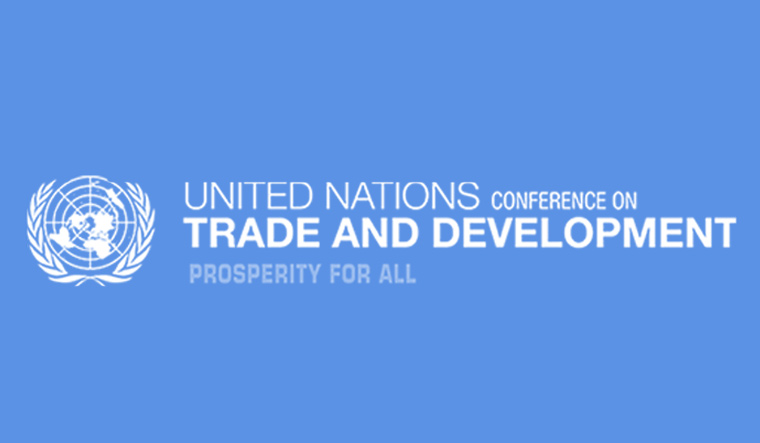
- 17 Apr 2024
Why is it in the News?
Global trade dynamics are expected to remain sluggish in 2024, the United Nations Conference on Trade and Development (UNCTAD) has warned.
Key Highlights of the Report:
- UNCTAD’s latest projections indicate global growth of 2.6 percent in 2024, slightly slower than in 2023.
- This marks the third consecutive year in which the global economy will grow at a slower pace than before the pandemic when the average rate for 2015–2019 was 3.2 percent.
India’s growth is expected to be marginally lower than in 2023:
- Regarding India, the report stated that the economy grew at 6.7 percent in 2023 and is expected to be marginally lower at 6.5 percent in 2024.
- It noted that the expansion in 2023 was influenced by strong public investment and the services sector, which received a boost from robust local demand for consumer services along with assured external demand for business services exports.
- The Reserve Bank of India (RBI) is expected to keep interest rates constant in the near term, while strong public investment expenditures will offset restrained public consumption spending.
About the United Nations Conference on Trade and Development (UNCTAD):
- The United Nations Conference on Trade and Development (UNCTAD) is an intergovernmental organization established in 1964 to promote the interests of developing countries in global trade.
- With its headquarters in Geneva, Switzerland, UNCTAD has 195 member states and collaborates with numerous nongovernmental organizations worldwide.
- The organization focuses on formulating policies related to various aspects of development, including trade, aid, transport, finance, and technology.
- UNCTAD plays a crucial role in addressing the concerns of developing countries regarding international institutions, such as the World Trade Organization (WTO), the International Monetary Fund (IMF), and the World Bank.
- By providing a platform for these countries to discuss and tackle their unique challenges, UNCTAD contributes to global economic development and reduces inequalities.
- Some notable achievements of UNCTAD include the establishment of the Global System of Trade Preferences (now replaced by the World Trade Organization), which reduces tariffs and removes non-tariff trade barriers, the Common Fund for Commodities, providing financial assistance to countries dependent on commodity exports, and various agreements for debt relief.
- In recent years, UNCTAD has focused on addressing globalization challenges and helping the least developed countries integrate into the global economy.
Hydrocarbon Extraction: Processes, Methods, Environmental Impact

- 16 Apr 2024
Why is it in the News?
Over millennia, mighty geological processes in the earth’s crust heated and compressed together pieces of life forms that had been dead for a while.
What Is a Hydrocarbon?
- The term hydrocarbon refers to an organic chemical compound that is composed exclusively of hydrogen and carbon atoms.
- Hydrocarbons are naturally occurring and form the basis of crude oil, natural gas, coal, and other important energy sources.
- They are highly combustible and produce carbon dioxide, water, and heat when they are burned.
- As such, hydrocarbons are highly effective as a source of fuel.
Where are Hydrocarbons Located?
- Hydrocarbons, such as natural gas, coal, crude oil, and petroleum, are typically found in underground rock formations within reservoirs.
- These reservoirs form when less resistant rocks are overlayed by more resistant ones, creating a lid that traps hydrocarbons beneath.
- Petroleum geology tools, methods, and techniques are used to assess these rocks for their porosity and permeability, determining how much hydrocarbons they can hold and how easily they can flow through them.
- Kerogen, lumps of organic matter, is the primary source of hydrocarbons within these subterranean rocks.
- Kerogen can be deposited from lacustrine, marine, or terrestrial ecosystems.
- Over time, surrounding rocks can become warmer and more compactified, exerting forces on kerogen that cause it to break down into various hydrocarbons, such as waxy oils, light oils, gas, and coal.
- Petroleum geologists locate and characterize kerogen-containing source rocks, studying their geophysical and thermal properties.
- They conduct modeling activities, analyze observational data, and dig exploration wells to estimate hydrocarbon quantities.
- Once a profitable hydrocarbon source is identified, drilling can commence.
How are the Hydrocarbons Accessed?
- Drilling and reservoir engineers employ various methods to extract hydrocarbons efficiently without damaging the reservoir.
- The process begins with creating a production well, strategically positioned to maximize drainage.
- A drilling machine, consisting of a drill pipe, drill collars, and a drill bit, is used to create the well.
- As drilling progresses, steel casings are lowered into the tunnel, and cement slurry is pumped into the gap between the casings and the tunnel's outer edge.
- The solidifying cement prevents cave-ins and blocks surrounding fluids from entering the well.
- The tunnel is filled with drilling fluid, which cools the drill bit and carries rock fragments to the surface for removal.
- Controlling drilling fluid pressure is crucial to prevent hydrocarbon eruptions. Modern drilling setups use blowout preventers to manage such events.
- Meanwhile, mud-logging records rock properties at different depths, aiding the process.
- Drill pipes can be extended or replaced as needed during the drilling process, which is now conducted by advanced drilling rigs equipped with power sources.
- Offshore rigs feature additional facilities to ensure stability and facilitate extraction through the water column.
How are the Hydrocarbons Extracted?
- Upon drilling the production well, it must be prepared for hydrocarbon drainage, called completion.
- Engineers remove the drill string and perforate the casing, allowing hydrocarbons to flow into the well and rise to the surface.
- A narrower tube encourages one-directional flow and controls outflow using valves.
- When pressure differences are insufficient for natural fluid ascent, pump jacks or other artificial lift methods can aid extraction.
- Workovers may be required to maintain or improve production efficiency over time.
- Extraction phases include primary (relying on natural processes), secondary (inducing artificial pressure), and tertiary (enhanced recovery methods, like steam injection) phases, each contributing to the total hydrocarbon yield.
What Happens When a Well is Depleted?
- Wells may cease extraction before depletion if operations become unprofitable.
- Properly plugging abandoned wells prevents hydrocarbon and gas leakage into surrounding environments, yet deterioration and failure of plugs remain concerns.
- Decommissioning is the most thorough but often expensive solution.
- Improperly abandoned wells contribute significantly to methane emissions, alongside emissions from extraction and component use.
- A 2018 study estimated that 9,000 oilfields in 90 countries released 1.7 billion tonnes of carbon dioxide in 2015 alone.
- Overall, the pursuit of subterranean hydrocarbons, including natural gas, coal, crude oil, and petroleum, employs various extraction methods.
- However, it is essential to consider the environmental impact and sustainability of these operations.
Thiruvalluvar
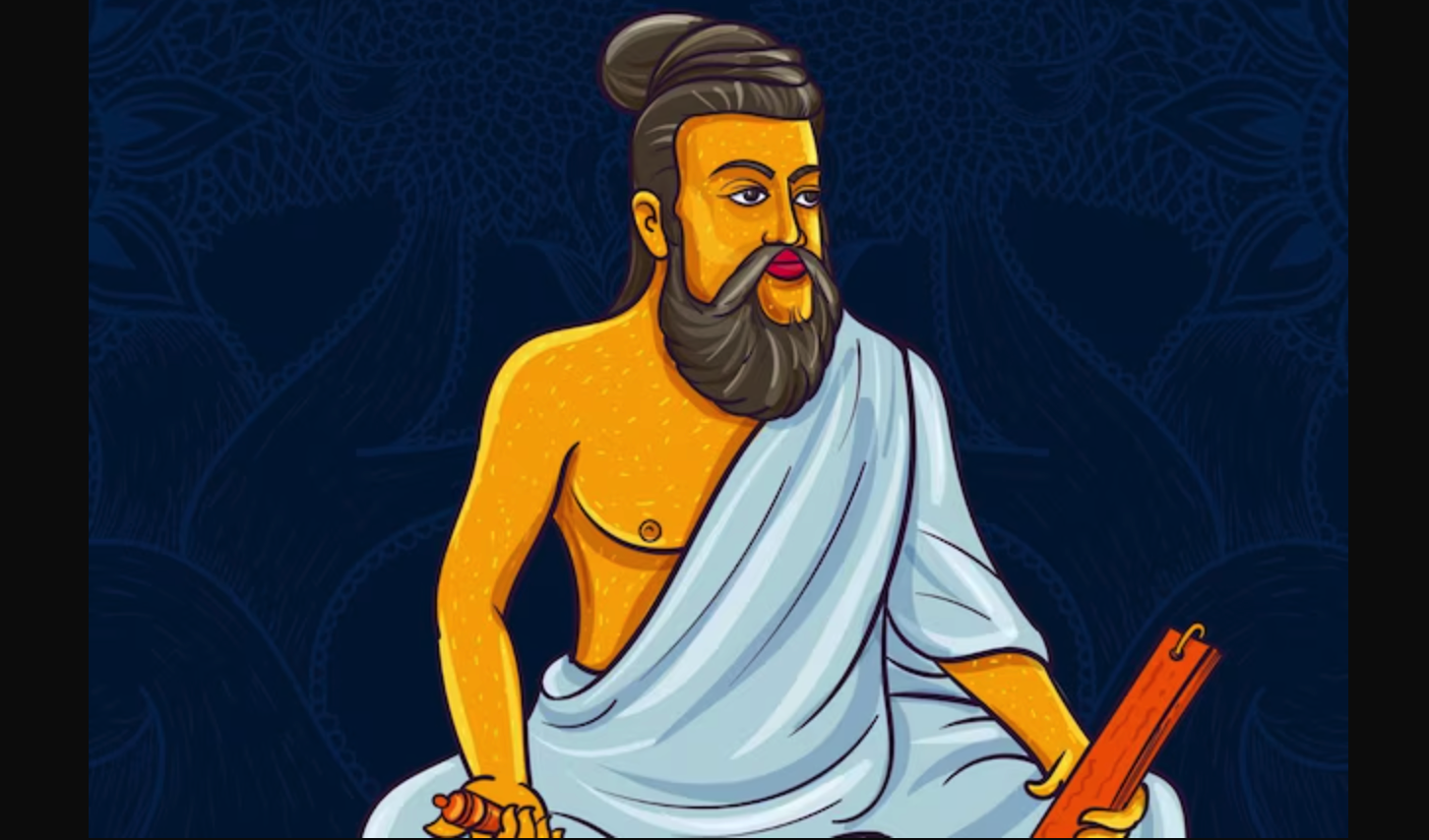
- 16 Apr 2024
Why is it in the News?
Seeking to connect with the people of Tamil Nadu where his party is trying to gain a foothold, Prime Minister Narendra Modi recently announced that the BJP will work towards building Thiruvalluvar cultural centers all over the world.
Who was Thiruvalluvar?
- Thiruvalluvar, the author of the revered 'Thirukkural' or 'Sacred Couplets', remains a figure of historical debate.
- His exact period and religious affiliation are uncertain, with proposed dates ranging from the 3rd or 4th century CE to the 8th or 9th century.
- Various groups regard him as a Hindu sage, a Jain sage, or a Dravidian saint with no religious identifiers except his Dravidian heritage.
- Accounts of Thiruvalluvar's origins are diverse.
- In Edward Jewitt Robinson's 1873 book, 'Tamil Wisdom: Traditions Concerning Hindu Sages and Selections from their Writings', he described Thiruvalluvar as a "Pariah" with a mother from "the low class" and a possibly Brahmin father.
- According to this narrative, Thiruvalluvar was found in a grove near a Shiva temple in Mayilapur and was taken in by the wife of a high-ranking Velalan before being entrusted to a "Pariah family."
- Despite the ambiguity surrounding Thiruvalluvar's identity, his wisdom-laden verses in 'Thirukkural' continue to influence and inspire generations across religious and cultural divides.
Why does Thiruvalluvar matter?
- Thiruvalluvar, affectionately called Valluvar by Tamils, is revered as a cultural and moral icon across caste and religious lines.
- His 'Thirukkural', a compilation of 1,330 couplets, is an integral part of Tamil culture, comparable to the Bhagavad Gita or Ramayana in North Indian Hindu households.
- It serves as a foundational text for ethical living and tracing Tamil cultural roots.
- Beyond Tamil Nadu, Thiruvalluvar's wisdom is celebrated in the context of ancient India's rich philosophical heritage, emphasizing morality and ethics.
- His enduring influence is evident as successive Indian finance ministers reference his teachings in annual Budget speeches.
- However, competing claims to Thiruvalluvar's legacy have sparked controversy, such as the 2019 debate surrounding the BJP's depiction of him in saffron robes instead of traditional white garments.
- Despite these disputes, the profound impact of Thiruvalluvar's teachings continues to resonate across various cultures and languages, fostering unity and moral guidance.
Why Are Political Parties Asserting Thiruvalluvar's Legacy?
- Political parties, both national and regional, have long vied for ownership of Thiruvalluvar's legacy. For instance, the BJP, with a limited grassroots presence in Tamil Nadu, seeks to bolster its standing through the appropriation of Tamil saints and icons.
Trade and Economic Partnership Agreement (TEPA)
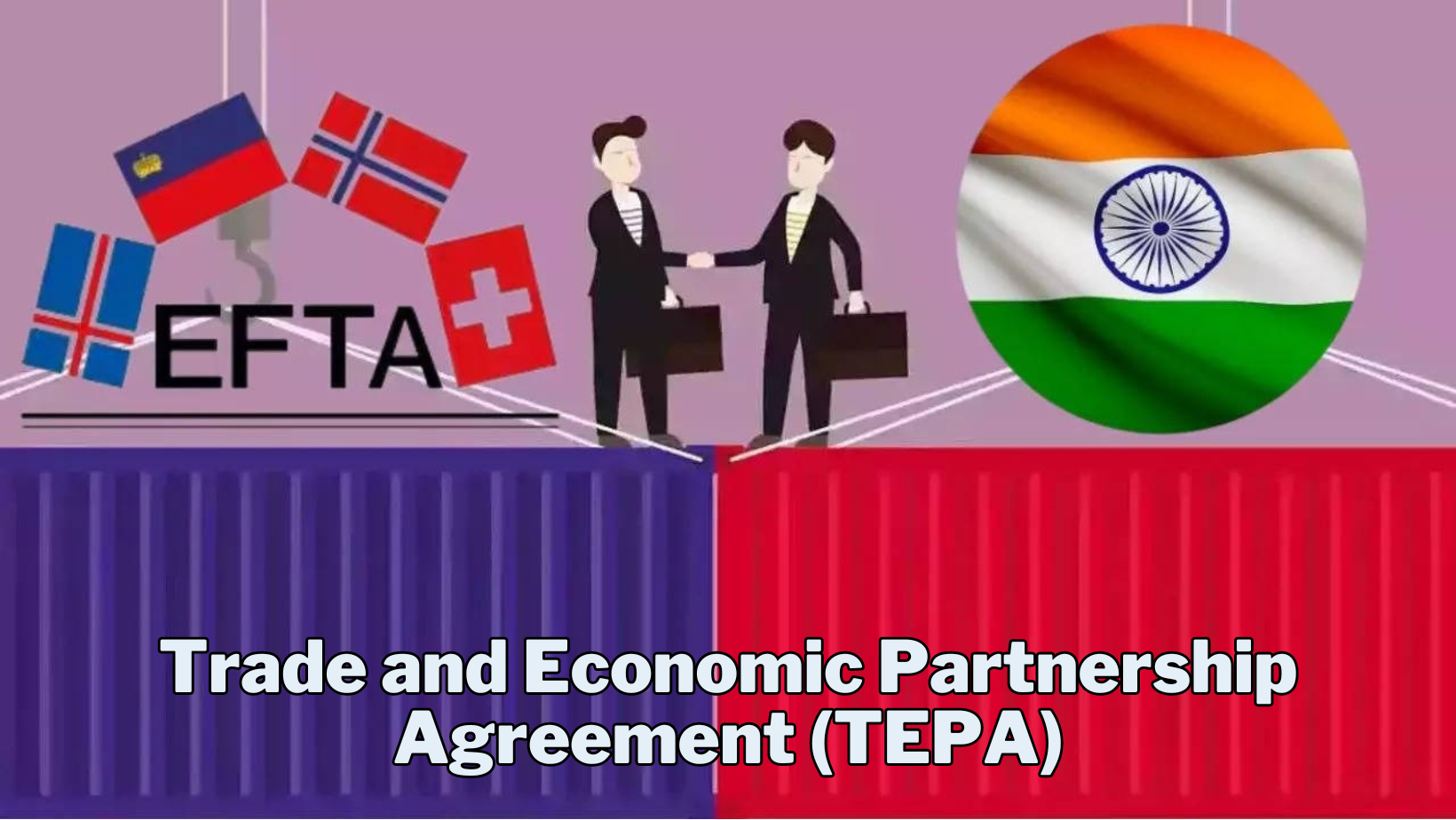
- 16 Apr 2024
Why is it in the News?
The new approach to intellectual property and investment through FTAs accepts an IP maximalist agenda of the United States Trade Representative; it threatens to upset the fine balance between public and private interests and push India away from essential innovations.
What is the Trade and Economic Partnership Agreement (TEPA)?
- The TEPA is a pact designed to foster trade and investment opportunities between India and the European Free Trade Association (EFTA).
- It endeavors to diminish or eliminate tariffs and non-tariff barriers across various product categories.
Objectives:
- Facilitate trade and investment by reducing tariffs and non-tariff barriers.
- Ensure equitable and transparent market access for service providers and investors.
- Enhance cooperation concerning the protection and enforcement of intellectual property rights.
- Streamline trade procedures, promote customs cooperation, and establish effective mechanisms for dispute resolution.
Coverage:
- The agreement encompasses 14 chapters, addressing key areas such as:
- Trade in goods
- Rules of origin
- Intellectual property rights (IPRs)
- Trade in services
- Investment promotion and cooperation
- Government procurement
- Technical barriers to trade
- Trade facilitation
- By addressing these comprehensive aspects, the TEPA seeks to bolster economic collaboration and foster mutually beneficial outcomes for both India and EFTA member states.
What is the European Free Trade Association (EFTA)?
- EFTA is an intergovernmental organization of four member countries that are not part of the European Union (EU): Iceland, Liechtenstein, Norway, and Switzerland.
- The association was set up in 1960 to promote closer economic cooperation and free trade in Europe.
How important is EFTA?
- Iceland, Liechtenstein, Norway, and Switzerland have a combined population of less than 14 million.
- But their association punches above its weight in terms of trade figures.
- In 2021, EFTA was the tenth-largest trader in the world in merchandise trade and the eighth-largest in trade in services.
What is EFTA’s history?
- EFTA was established in 1960 by seven countries: Austria, Denmark, Norway, Portugal, Sweden, Switzerland, and the United Kingdom.
- Iceland and Liechtenstein joined EFTA in 1970 and 1991, respectively.
- Denmark, the UK, Portugal, Austria, and Sweden then left EFTA to join the EU between 1973 and 1995.
UN Permanent Forum on Indigenous Issues
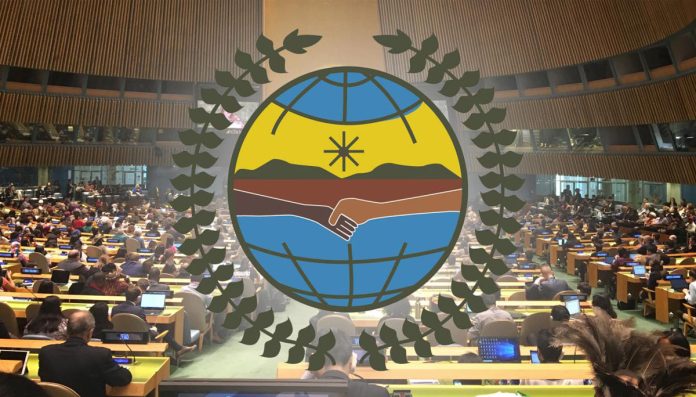
- 16 Apr 2024
Why is it in the News?
As the 23rd session of the UN Permanent Forum on Indigenous Issues begins in New York, United States on April 15, participants pointed out that though recognition of indigenous territories is increasing, it is not happening at the pace the planet needs.
About the UN Permanent Forum on Indigenous Issues:
- Established in 2000, the UNPFII serves as an advisory body to the United Nations Economic and Social Council (ECOSOC), focusing on indigenous issues related to economic and social development, culture, environment, education, health, and human rights.
- Alongside the Expert Mechanism on the Rights of Indigenous Peoples and the Special Rapporteur on the Rights of Indigenous Peoples, the UNPFII is one of three UN entities mandated to address Indigenous Peoples' issues.
The Permanent Forum's primary objectives include:
-
- Providing expert advice and recommendations to the Council, United Nations programs, funds, and agencies.
- Raising awareness and fostering integration and coordination of indigenous issues within the UN system.
- Preparing and disseminating information on indigenous issues.
Membership and Structure
- The UNPFII consists of sixteen independent experts who serve three-year terms and may be re-elected or re-appointed for one additional term.
- Eight members are nominated by governments, while the remaining eight are nominated directly by indigenous organizations from their respective regions.
- Following each session, the UNPFII submits a report containing recommendations and draft decisions to the ECOSOC, contributing to global efforts to address and improve the well-being of Indigenous Peoples worldwide.
Long Period Average (LPA) Rainfall
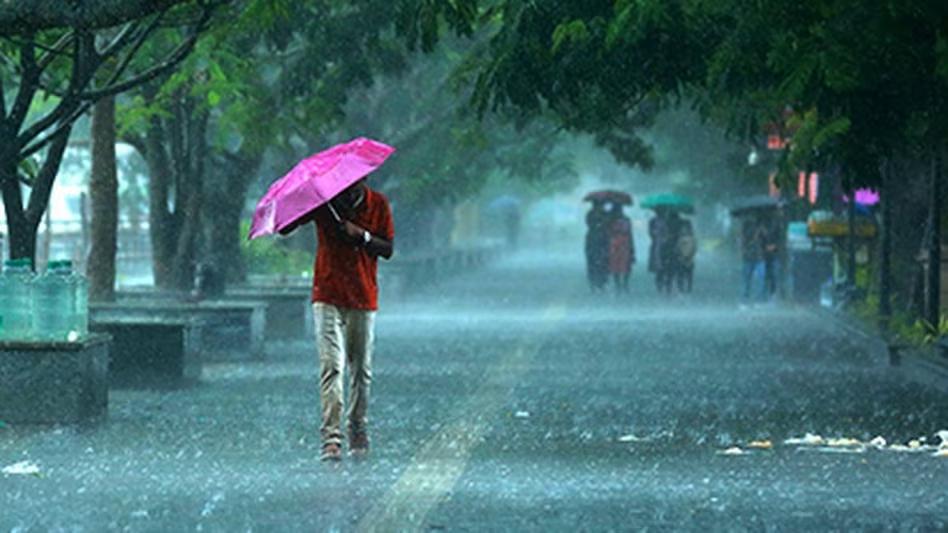
- 16 Apr 2024
Why is it in the News?
Ministry of Earth Sciences announced recently that the country as a whole is likely to receive above-normal rainfall during the southwest monsoon from June to September 2024.
What is the Long Period Average (LPA) of Rainfall?
- The India Meteorological Department (IMD) predicts a “normal”, “below normal”, or “above normal” monsoon in relation to a benchmark “long period average” (LPA).
- According to the IMD, the “LPA of rainfall is the rainfall recorded over a particular region for a given interval (like month or season) average over a long period like 30 years, 50 years, etc”.
- While this quantitative benchmark refers to the average rainfall recorded from June to September for the entire country, the amount of rain that falls every year varies from region to region and from month to month.
- Therefore, along with the countrywide figure, the IMD also maintains LPAs for every meteorological region of the country — this number ranges from around 61 cm for the drier Northwest India to more than 143 cm for the wetter East and Northeast India.
Why LPA is Needed?
- The IMD records rainfall data at more than 2,400 locations and 3,500 rain-gauge stations.
- Because annual rainfall can vary greatly not just from region to region and from month to month, but also from year to year within a particular region or month, an LPA is needed to smooth out trends so that a reasonably accurate prediction can be made.
- A 50-year LPA covers for large variations in either direction caused by freak years of unusually high or low rainfall (as a result of events such as El Nino or La Nina), as well as for the periodic drought years and the increasingly common extreme weather events caused by climate change.
What is the Range of Normal Rainfall?
- The IMD maintains five rainfall distribution categories on an all-India scale. These are:
- Normal or near normal, when the percentage departure of actual rainfall is +/-10% of LPA, that is, between 96-104% of LPA;
- Below normal, when the departure of actual rainfall is less than 10% of LPA, that is 90-96% of LPA;
- Above normal, when actual rainfall is 104-110% of LPA;
- Deficient, when the departure of actual rainfall is less than 90% of LPA; and
- Excess, when the departure of actual rainfall is more than 110% of LPA.
Space Tourism

- 15 Apr 2024
Why is it in the News?
Entrepreneur and pilot on the NS-25 mission of Blue Origin — a company founded by Jeff Bezos, who is also Gopi Thotakura is set to become the first Indian to venture into space as a tourist the founder of Amazon.
Context:
- In recent years, space tourism has grown by leaps and bounds.
- The space tourism market was valued at $848.28 million.
- It is expected to grow to $27,861.99 million by 2032.
- However, there are several challenges, such as high cost, and environmental concerns, that may limit the industry’s growth.
- The NS-25 mission, which Gopi Thotakura is a part of, is a sub-orbital mission. Thotakura and his other crew members will be taken to outer space via New Shepard, a fully reusable sub-orbital launch vehicle developed specifically for space tourism by Blue Origin.
What is Space Tourism?
- Space tourism is essentially a section of the aviation sector that seeks to provide tourists with the opportunity to become astronauts and experience space travel for recreational, leisure, or business purposes.
- There are two main types of space tourism, sub-orbital and orbital.
- The sub-orbital spacecraft takes passengers just beyond the Kármán line (it lies nearly 100 kilometers above our heads and is considered to be the boundary between Earth’s atmosphere and outer space).
- The passengers get to spend a few minutes in outer space and then come back to Earth.
- The orbital spacecraft, on the other hand, takes passengers much further than the Kármán line.
- Usually, passengers can spend from a couple of days to more than a week at an altitude of nearly 1.3 million feet.
- In September 2021, Space X’s Falcon 9 took four passengers to an altitude of 160 km where they spent three days orbiting the Earth.
What are the Challenges?
- Currently, space tourism is expensive as a passenger generally has to pay at least a million dollars to reach outer space.
- This amount is out of reach for almost everyone.
- Moreover, several studies have pointed out that space tourism may lead to environmental damage as rockets emit gaseous and solid chemicals directly into the upper atmosphere.
- A 2022 study done by researchers found that the soot emissions from rocket launches are far more effective at warming the atmosphere compared to other sources.
- Safety is also a concern when it comes to space tourism.
- Despite high safety standards, a total of 676 people have flown into space and 19 of them have died, as of November 2023, according to a report by Astronomy Magazine.
- This means that approximately 3% of astronauts died during their space flight which is quite a high fatality rate.
Special Olympics Bharat
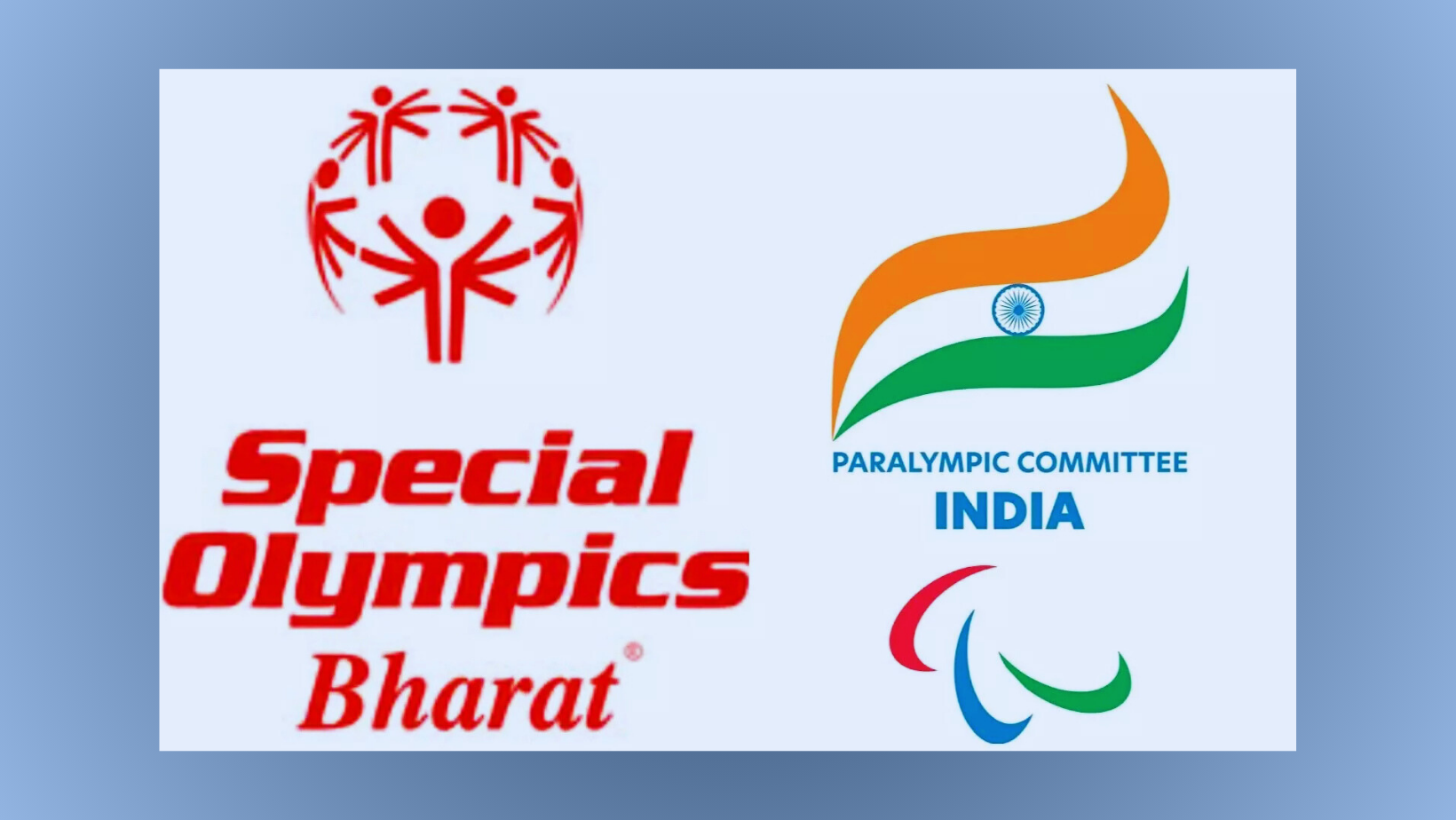
- 15 Apr 2024
Why is it in the News?
Special Olympics Bharat (SOB), a National Sports Federation of India is forming district units across Tamil Nadu through elections on April 22.
About Special Olympics Bharat:
- Special Olympics Bharat is a National Sports Federation also registered under the Indian Trust Act 1882 in 2001 and is accredited by Special Olympics International to conduct Special Olympics Programs in India.
- It is recognized by the Ministry of Youth Affairs & Sports, Government of India as a National Sports Federation in the Priority Category, for the development of Sports for Persons with Intellectual Disabilities.
- It is a designated Nodal Agency for all disabilities on account of its national presence and experience, especially in rural areas which account for nearly 75 percent of the disabled population in India.
- Mission: The mission of Special Olympics is to provide year-round sports training and athletic competition in a variety of Olympic-type sports for children and adults with intellectual disabilities, giving them continuing opportunities to develop physical fitness, demonstrate courage, experience joy, and participate in a sharing of gifts, skills, and friendship with their families, other Special Olympics athletes and the community.
- Special Olympics Bharat works towards the social acceptance of people with intellectual disabilities, whereby they are respected and given equal chances to become productive citizens.
- They encourage athletes to move from the Special Olympics training and competition into school and community programs where they can compete in regular sports activities.
Special Olympics Bharat strives to:
- Focus on holistic development and training that goes beyond the classrooms into the playing fields, cultural and community centers, to motivate children with disabilities to join and remain in school
- Create role models who will inspire the children and also motivate parents to send their children to school and to participate in sports and other extra-curricular activities
- Train teachers to sensitize them to the needs of special children, and create a cadre of physical education teachers from among the disabled who can work with schools and community centers
- Ensure maximum involvement of the community for greater public understanding and acceptance of people with intellectual disabilities.
- Ensure all Special Olympics Bharat activities local, state, national, and international reflect the Olympic movement values, standards, ceremonies, and events.
What is Intellectual Disability?
- Intellectual disability is a lifelong condition that affects a person’s intellectual skills and their behaviour in different situations.
- It can include difficulties in communication, memory, understanding, problem-solving, self-care, social and emotional skills, and physical skills.
- People with intellectual disability have the same feelings, rights, and aspirations as everyone else.
- Intellectual disability does not define who a person is, how they should be treated, or how they want to live.
- An IQ test determines whether a person has an intellectual disability. IQ scores lower than 70 indicate an intellectual disability.
Hubble Tension
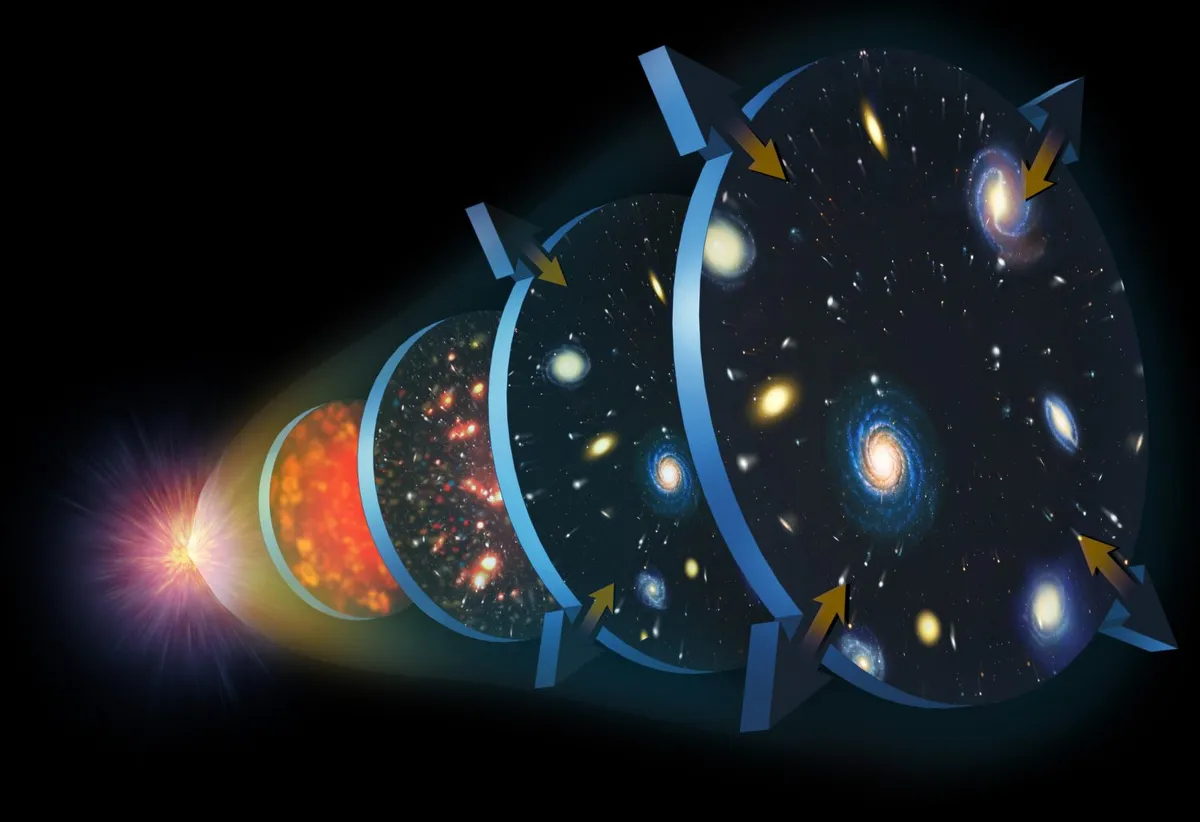
- 15 Apr 2024
Why is it in the News?
One of the biggest mysteries in cosmology is the ‘Hubble tension’, the puzzle that the expansion of the Universe we see today doesn’t match what we think it should be from looking at the early cosmos.
What is Hubble Tension?
- The Hubble tension refers to a puzzling disagreement between two methods of measuring the universe's expansion rate, represented by the Hubble constant (H0).
- The Hubble constant describes how fast galaxies move away from each other due to cosmic expansion.
- Researchers employ two primary approaches to estimate H0: the cosmic distance ladder and analysis of the cosmic microwave background (CMB).
Cosmic Microwave Background (CMB):
- CMB constitutes a ubiquitous sea of photons, remnants of the Big Bang's aftermath.
- Scientists scrutinize CMB for temperature variations and employ intricate trigonometric techniques to analyze its large-scale properties.
- This analysis culminates in an estimation of cosmic expansion at approximately 68 (km/s)/Mpc.
Cosmic Distance Ladder:
- This method facilitates the measurement of distances to celestial objects spanning various proximity ranges.
- Notably, Cepheid variable stars, which exhibit predictable luminosity fluctuations over time, serve as crucial distance indicators.
- By gauging the brightness of Cepheid variables, researchers can infer their distances, leading to an estimation of H0 around 73 (km/s)/Mpc.
Discrepancy and Hubble Tension:
- The utilization of these two distinct measurement methods yields slightly divergent values for H0, resulting in the emergence of the Hubble tension.
Significance of the Hubble Tension:
- The presence of the Hubble tension suggests potential implications, including unexplored physical phenomena or systematic errors in measurement techniques.
- Resolving this tension is imperative to enhance our comprehension of the universe's expansion dynamics and the fundamental laws governing it.
Operation Meghdoot
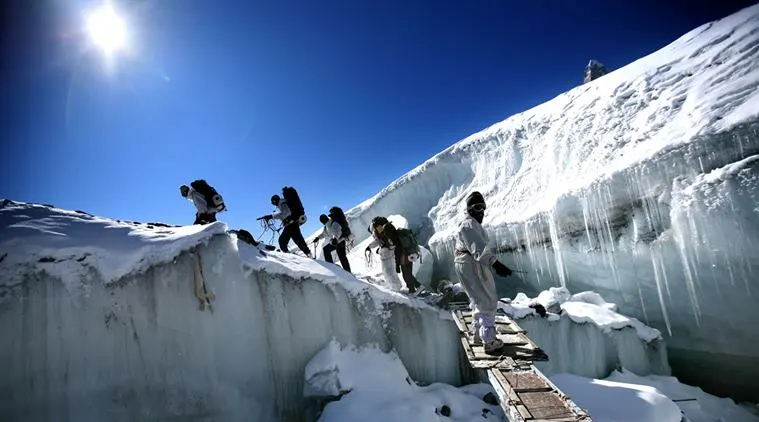
- 15 Apr 2024
Why is it in the News?
India commemorates 40 years since the launch of Operation Meghdoot, a critical mission to secure the strategic heights of the Siachen glacier, acknowledged as the highest battlefield in the world.
About Operation Meghdoot:
- Operation Meghdoot was the codename for the Indian Army operation to take full control of the (Siachen Glacier in Ladakh).
- It was launched in 1984 and it was unique as it involved the first assault on the world's highest battlefield.
- This operation was launched on April 13, 1984, by the Indian Army and Indian Air Force (IAF), marking a pivotal moment in securing the Siachen Glacier, a strategically crucial region dominating Northern Ladakh.
- The operation involved airlifting Indian Army soldiers, with IAF helicopters operating in the area since 1978, including the first landing of an IAF helicopter on the glacier in October 1978.
- The need for Operation Meghdoot arose due to Pakistan's cartographic aggression in Ladakh, allowing foreign mountaineering expeditions in Siachen.
- Intelligence inputs about impending Pakistani military action prompted India to secure strategic heights on Siachen, deploying troops via airlifts and air-dropping supplies to high-altitude airfields.
What was IAF's Role and Evolution in Operation Meghdoot?
- The IAF played a crucial role in supporting Operation Meghdoot, initially focusing on transport and helicopter aircraft for troop and material transport.
- Gradually, the IAF expanded its role, deploying fighter aircraft like the Hunter, MiG-23s, and MiG-29s, operating from high-altitude airfields at Leh and Thoise.
- This expanded role included fighter sweeps and simulated strikes over the glacier, boosting morale and deterring adversaries.
- Operating on the highest battlefield globally, IAF helicopters are the lifeline for Indian troops, providing crucial support in emergencies, logistics supply, and evacuating the sick and wounded from the glacier.
- As the Indian Army celebrates 40 years on the Siachen Glacier, it reflects not only on the progress made in technological advancements and logistical improvements but also on the sacrifices and dedication of its personnel.
- 'Operation Meghdoot' stands as a testament to India's commitment to safeguarding its borders and ensuring the well-being of its troops in one of the world's most challenging terrains.
About Siachen Glacier:
- The Siachen Glacier, situated in the Eastern Karakoram range of the Himalayas, is located just northeast of Point NJ9842, where the Line of Control (LOC) between India and Pakistan ends.
- Administered by India since Operation Meghdoot in 1984, the glacier spans from northwest to southeast, originating at the Indira Col West and descending from an altitude of 6,115 meters to 3,570 meters.
- As the second-longest glacier in the world's non-polar areas, the Siachen Glacier is surpassed only by Tajikistan's Fedchenko Glacier.
- It lies south of the significant drainage divide separating the Eurasian Plate from the Indian subcontinent in the glaciated Karakoram region, sometimes referred to as the "Third Pole."
- The Nubra River finds its source in the Siachen Glacier, highlighting the glacier's ecological importance.
GRB 221009A - Gamma-ray Bursts (GRBs)

- 13 Apr 2024
Why is it in the News?
Northwestern University recently confirmed that the brightest gamma-ray burst ever recorded, GRB 221009A, was caused by the collapse and explosion of a massive star.
About GRB 221009A:
- GRB 221009A, also known as Swift J1913.1+1946, is the brightest gamma-ray burst ever detected, estimated to be ten times brighter than the previous record holder.
- The burst itself lasted around seven minutes, but its effects were observable for over ten hours.
- GRB 221009A originated from a galaxy estimated to be 2.4 billion light-years away, yet it was powerful enough to influence Earth's atmosphere.
- This exceptionally bright burst emitted across a vast range of the electromagnetic spectrum, providing a unique opportunity for scientists to study this rare phenomenon in detail.
- The cause of the burst is attributed to the collapse of a massive star, but scientists are still investigating why it was so much brighter than other gamma-ray bursts.
What are Gamma-ray Bursts?
- Gamma-ray bursts (GRBs) are the most powerful explosions in the universe.
- These brief flashes of high-energy light result from some of the universe's most explosive events, including the birth of black holes and collisions between neutron stars.
- Lasting a few milliseconds to several minutes, GRBs can be hundreds of times brighter than an average supernova, making them as luminous as a million trillion suns.
- Thus, when a GRB erupts, it briefly becomes the brightest source of electromagnetic radiation in the observable universe.
- Gamma Ray Bursts are difficult to study because they are so short-lived.
- They were first detected by the Vela satellites, which were designed to detect nuclear tests during the Cold War.
- It was only years after their detection that they were declassified.
- The location of gamma-ray bursts within their host galaxy and their surrounding environment informs us as to the formation and evolution of the progenitor system, providing insight into stellar evolution and star formation across the age of the universe.
What causes a gamma-ray burst?
- The cause of a gamma-ray burst depends on how long it lasts.
- GRBs that last less than two seconds are caused by the merger of two neutron stars or the merger of a neutron star and a black hole.
- Longer GRBs, which can last hours, are triggered when a massive star collapses and births a black hole.
- In both cases, GRBs result from jets of particles accelerated to around 99.9% of the speed of light.
How powerful are gamma-ray bursts?
- In just a few seconds, a gamma-ray burst can emit as much energy as the sun will put out over its entire 9 billion-year lifetime
Do gamma-ray bursts happen in the Milky Way?
- GRBs seem to be most closely associated with galaxies that are in the midst of intense star formation, a period that our galaxy seems to have matured out of 2 billion to 3 billion years ago.
- However, the Milky Way is filled with the supernova remnants that mark the deaths of massive stars, indicating that our galaxy was once home to GRBs.
Defence Attaché (DA)
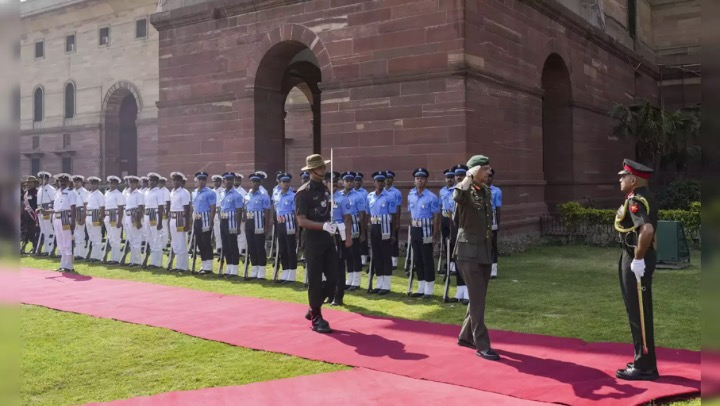
- 13 Apr 2024
Why is it in the News?
As India expands its presence in defense diplomacy and plans to deploy Defense Attachés to Indian missions in Africa, Armenia, and the Philippines, experts and experienced diplomats advise against simply "rationalizing" their numbers.
What’s a Defense Attaché?
- According to the Geneva Centre for the Democratic Control of Armed Forces (DCAF), a defence attaché is a member of the armed forces serving at an embassy as a “representative of his/her country’s defence establishment abroad and in this capacity enjoys the diplomatic status and immunity.
- The defence attaché’s work usually concerns bilateral military and defence relations.
- Some countries send attachés for security issues, such as migration or matters relating to police and justice.
- The defence attachés are also responsible for facilitating communication and cooperation between their home nation’s armed forces and the host country’s military.
- They act as military and/or security advisors to their country’s ambassador and embassy staff.
- They can also promote their home nation’s military weapons industry.
- Defence attachés collect and examine military intelligence, facilitate military cooperation pacts, and give an evaluation of security issues to their home country’s government.
- They also act as a link between diplomats and the military.
India to Send Defence Attachés to New Countries:
- India has started dispatching defence attachés to many new countries, while reportedly downsizing the military personnel at its missions in some other nations.
- 15-16 new attaches from the Indian Navy, the Indian Air Force (IAF), and the Indian Army are being posted to Poland, the Philippines, Armenia, and the African countries of Tanzania, Mozambique, Djibouti, Ethiopia, and Ivory Coast.
- In the next phase, 10 entirely new defence wings will be created in different countries, with a particular focus on nations to which arms can be exported.
Why the Other Countries Matter?
- India dispatching a defense attaché to Poland, which is a part of the European Union (EU) and has emerged as an important security partner in Europe in recent years, is also significant.
- The EU posted a military attaché to its mission in India for the first time last year. India’s move to do the same in Poland is “reflective of the desire to expand two-way defence ties.
- Armenia has become a major exporter of India’s arms.
- India has already inked deals with the Asian country for Pinaka rockets, Akash missiles, ammunition, and multi-barrel rocket launchers, with some of them coming amid Armenia’s clash with Azerbaijan over Nagorno-Karabakh.
- Armenia has shown interest in expanding its defence ties with India.
- China’s military assertiveness in the South China Sea has prompted India to grow military ties with ASEAN countries.
- India’s decision to send defence attachés for the first time to the Philippines comes in the wake of the sale of Indian arms to Manila.
- India signed a $375 million deal with the Philippines in 2022 to supply three batteries of the BrahMos missile and will soon start the delivery of the missiles to the Southeast Asian country.
Science Based Targets Initiative (SBTi)
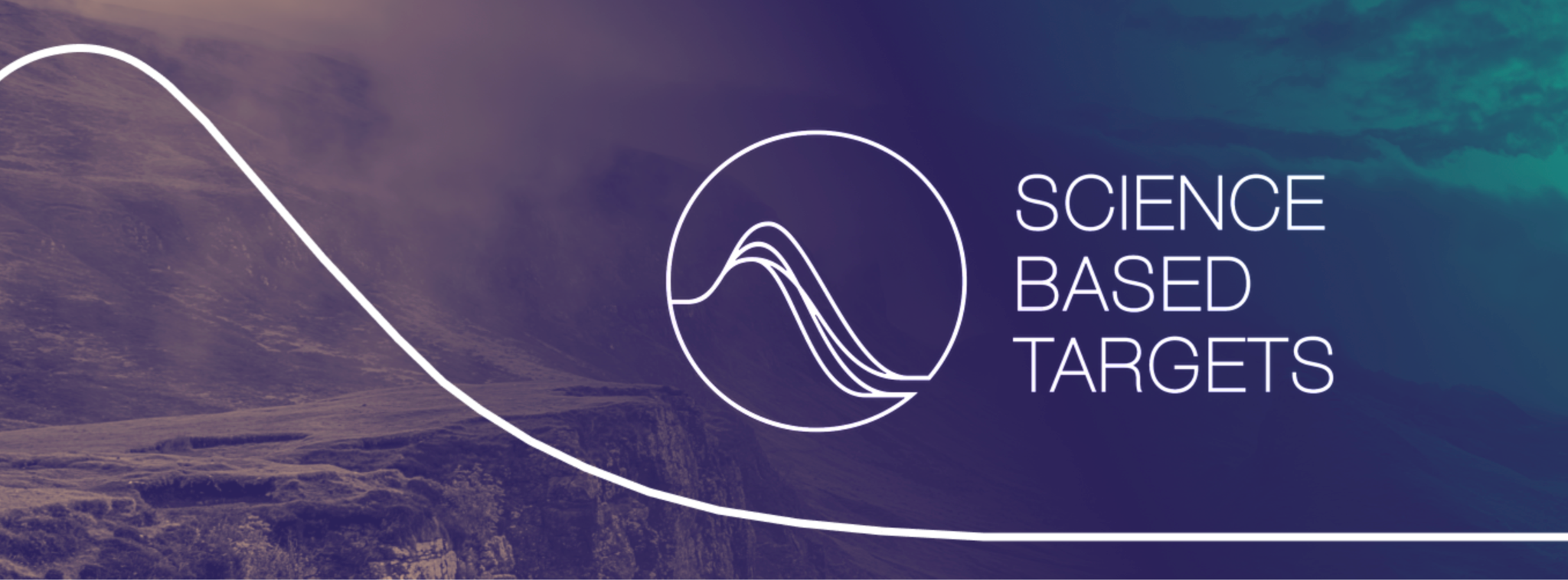
- 13 Apr 2024
Why is it in the News?
A contentious recent decision by the Science Based Targets Initiative (SBTi), permitting carbon offsetting for Scope 3 emissions of businesses with SBTi-based climate targets, has stirred controversy and skepticism.
About Science Based Targets Initiative (SBTi):
- The Science-based Targets Initiative (SBTi) is a global movement launched post the 2015 Paris Climate Agreement to mobilize companies in combating climate change.
- SBTi supports businesses in their decarbonization projects, ensuring compatibility with limiting global temperature rise to 1.5C° and achieving carbon neutrality by 2050.
- Backed by a scientific method, SBTi verifies company objectives are aligned with COP21 goals.
- SBTi was initiated by four international organizations:
- United Nations Global Compact (UNGC)
- World Wildlife Fund (WWF)
- Carbon Disclosure Project (CDP)
- World Resource Institute (WRI)
- The primary objective of SBTi is to guide businesses in setting greenhouse gas (GHG) emission reduction targets that align with the Paris Agreement, are scientifically valid, and contribute significantly to reducing global emissions.
To determine a 1.5C° trajectory compatibility, SBTi uses science-based targets that account for the following factors:
-
- A carbon budget focused on achieving the 1.5C° global warming limit.
- GHG emission scenarios from the IPCC or the IEA.
- Emission allocation method: emission intensity reduction, absolute emission reduction, or emission intensity convergence toward a sector-specific reference level
- Through this methodology, companies can establish clear and science-based GHG reduction targets, effectively contributing to global emission reduction efforts.
SBTi's Net Zero objective:
- In October 2021, SBTi introduced its "Net Zero" benchmark, challenging committed companies to achieve long-term reduction targets up to carbon neutrality.
The Net Zero goal builds upon the initial SBT approach and focuses on four essential components:
-
- Short-term targets: To align with the 1.5°C objective, companies must set targets for reducing their total emissions (Scopes 1, 2, and 3) within a maximum of 5 to 10 years.
- Long-term objectives: Alongside short-term targets, Net Zero requires companies to define long-term goals compatible with limiting global warming to 1.5°C and achieve them by 2050 (or 2040 for the energy sector).
- Carbon finance for short-term contributions: Companies are encouraged to invest in external carbon sequestration or avoidance projects by purchasing carbon credits, complementing their GHG reduction efforts. SBTi prioritizes sequestered emissions over avoided emissions, considering the latter's carbon credits less reliable.
- Neutralization: As the final stage in reaching carbon neutrality, companies must minimize residual emissions and then offset them through carbon sequestration actions.
- The SBTi movement has rapidly gained international recognition for its rigor, reliability, and the credibility of the people behind it.
- Several thousand companies of all sizes have rapidly adopted the scientific approach it promotes. To date, nearly 6,800 companies worldwide have signed up to the SBTi.
Gujarat Freedom of Religion Act
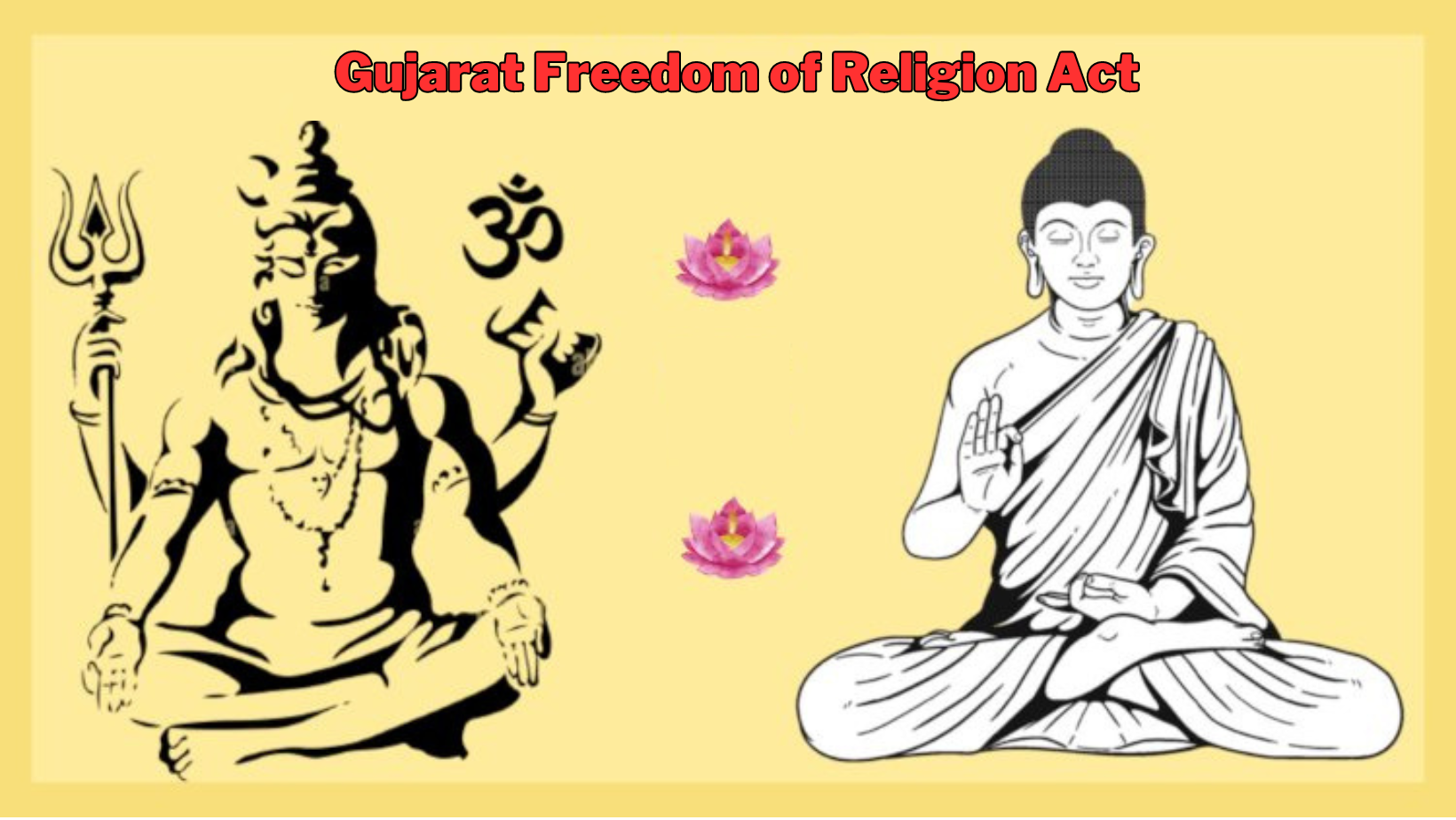
- 13 Apr 2024
Why is it in the News?
The Gujarat government recently clarified that Buddhism and Hinduism must be considered as two separate religions for religious conversions in the state.
Why did the Gujarat Government Issue the Circular?
- The Gujarat government issued the circular to address an issue regarding the application process for converting from Hinduism to Buddhism.
- The circular, issued by the Home Department highlights that the proper procedures outlined in the Gujarat Freedom of Religion Act (GFR Act) are not being followed.
- The circular points out that some offices are rejecting these conversion applications, arguing that under Article 25(2) of the Constitution, Sikhism, Jainism, and Buddhism are considered part of Hinduism.
- Therefore, applicants are told they don't need permission for religious conversion.
- This interpretation refers to Article 25, which guarantees religious freedom.
- Article 25(2)(b) allows laws for social welfare or reform for Hindus, which includes Sikhs, Jains, and Buddhists.
- Notably, the circular contrasts with a proposed 2006 amendment to the GFR Act, which suggested considering Jainism and Buddhism as part of Hinduism.
- However, the circular clarifies that, according to the GFR Act, Buddhism must be seen as a separate religion.
How does the GFR Act Govern Religious Conversions in Gujarat?
- The Gujarat Freedom of Religion Act (GFR Act) controls how people change their religion in Gujarat.
- According to the state government, this law aims to stop religious conversion by offering rewards, using force, lying, or tricking people.
- One part of the law, Section 3, makes it a crime to force or persuade someone to change their religion, whether by using force, offering rewards, trickery, or arranging marriages.
- Another part, Section 3A, added in 2021, lets anyone who feels harmed or their relatives report these crimes to the police.
- People who break Section 3 can be sent to jail for up to three years and fined up to Rs 50,000.
- If the person affected is a woman, a child, or from certain communities, the punishment is harsher – up to four years in jail and a fine of Rs 1 lakh.
- For a religious conversion to be legal, Section 5 says the person leading the ceremony must get permission from the District Magistrate beforehand.
- And the person who changes their religion must tell the District Magistrate afterward.
- Not doing this can result in a one-year jail term or a fine of up to Rs 1,000.
- In 2021, the GFR Act was changed to include more rules.
- It now makes it a crime to change religion through marriage (Section 4A) and says marriages are void if one person converts before or after getting married (Section 4B).
- It also punishes people involved in organizations that unlawfully convert others (Section 4C). The accused now have to prove that the conversion was legal (Section 6A).
Asian Development Bank (ADB)
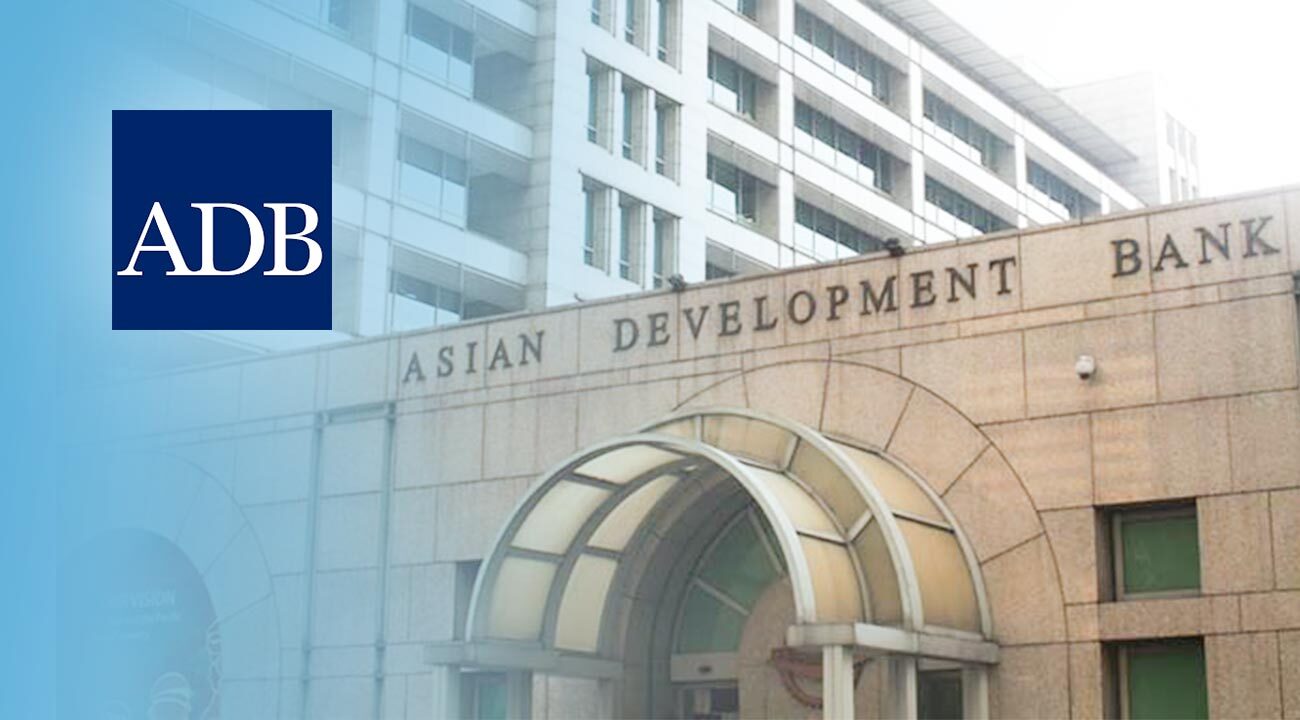
- 13 Apr 2024
Why is it in the News?
The Asian Development Bank (ADB) recently raised its forecast for India’s GDP growth in the current fiscal year ending on March 31, 2025, to 7%, from 6.7% earlier, citing robust public and private investment as well as expectations of a gradual improvement in consumer demand as the rural economy recovers.
What is the Asian Development Bank?
- The Asian Development Bank (ADB) is a global development finance agency whose aim is to help developing member countries in reducing poverty and improving people’s quality of life.
- It came into existence in 1966 and it is headquartered in Manila, Philippines.
- It aids in pushing social and economic development by providing loans, technical assistance, grants, and equity investments.
- ADB is owned and financed by its 68 members, 49 of whom are from the Asia-Pacific region.
- ADB’s key partners are governments, the commercial sector, non-government organizations, development agencies, community-based groups, and foundations.
- ADB will follow three complementing strategic agendas: inclusive growth, ecologically sustainable growth, and regional integration, as outlined in Strategy 2020, a long-term strategic framework approved in 2008.
- The major objective of the Asian Development Bank is to ensure market prosperity and enhance collaboration among Asia-Pacific countries.
- The ADB oversees significant projects within the region and sometimes raises funding through international bond markets.
- To promote development, the Asian Development Bank provides grants, loans, technical support, and equity investments to its developing member nations, the private sector, and public-private partnerships.
- They also use co-financing activities to supply support while tapping official, commercial, and export finance sources.
- Members and associate members of the international organization Economic Commission for Asia and the Far East are eligible to affix the ADB.
- Other regional and non-regional developed countries that are members of the United Nations or any of its specialized agencies are eligible.
Who Controls the Asian Development Bank?
- The ADB is run by a board of governors, which represents the member countries of the ADB.
- As of 2022, ADB's five largest shareholders are Japan and the United States (each with 15.6% of total shares), the People's Republic of China (6.4%), India (6.3%), and Australia (5.8%).
Funding Sources:
- The ADB sustains its operations through various channels, including member contributions, earnings from lending activities, and the repayment of loans.
Volcanic Vortex Rings
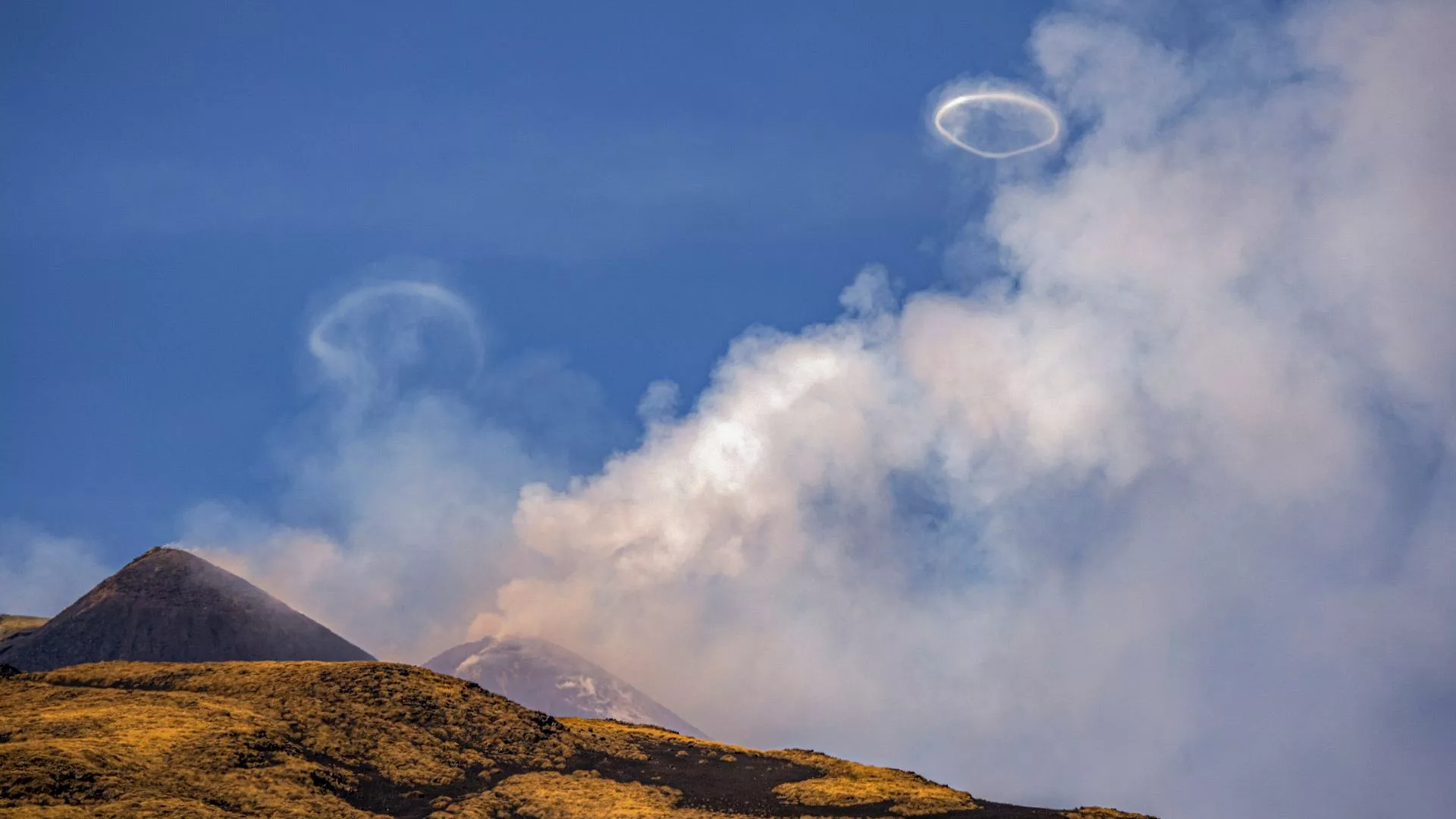
- 12 Apr 2024
Why is it in the News?
Since last week, Mount Etna has been sending up almost perfect rings of smoke into the air which are a rare phenomenon that scientists refer to as volcanic vortex rings.
What are Volcanic Vortex Rings?
- Vortex rings are generated when gas, predominantly water vapor, is released rapidly through a vent in the crater.
- The vent that has opened up in the crater is almost perfectly circular so the rings.
- The phenomenon was first observed at Mt. Etna and Mt. Vesuvius in Italy in 1724 and has been documented in an engraved plate from 1755.
- In more recent times, volcanic vortex rings have been observed at volcanoes such as Redoubt in Alaska, Tungurahua in Ecuador, Pacaya in Guatemala, Eyjafjallajökull and Hekla in Iceland, Stromboli in Italy, Sakurajima in Japan, Yasur in Vanuatu, Whakaari in New Zealand, and Momotombo in Nicaragua.
- According to the report, the rings can remain in the air for up to 10 minutes but tend to disintegrate quickly if conditions are windy and turbulent.
About Mount Etna:
- Mount Etna, sometimes referred to simply as Etna, is an active volcano on the east coast of Sicily, the largest island in the Mediterranean Sea, lying just off the toe of the Italian “boot”.
- Etna’s peak is the highest in Italy south of the Alps, and it is Europe’s largest and one of the most active volcanoes.
- Etna’s summit has five craters, which are responsible for most of the volcano’s eruptions; there are also “flank” eruptions that occur out of 300-odd vents of varying sizes along the slopes of the mountain.
- Etna is in almost constant activity and has seen, since the year 1600, at least 60 flank eruptions and many more summit eruptions.
- In recent years, summit eruptions have occurred in 2006, 2007-08, on two occasions in 2012, 2018, and 2021; flank eruptions have taken place in 2001, 2002-03, 2004-05, and 2008-09.
- Etna has been a World Heritage Site since 2013, and according to UNESCO, the volcano’s eruptive history can be traced back 500,000 years.
- At least 2,700 years of this activity have been documented.
Apple Warns Users of "Mercenary Spyware"

- 12 Apr 2024
Why is it in the News?
Apple has cautioned its users in India and 91 other countries that their iPhone may have come under attack from “mercenary spyware”, including Pegasus, a malware developed by the Israeli company NSO Group.
What are Mercenary Spyware Attacks?
- Mercenary spyware attacks represent an elevated level of cyber threat, characterized by their intricate nature and highly targeted approach.
- These attacks, surpassing typical cybercriminal activity and consumer malware, are meticulously crafted to infiltrate specific individuals with significant resources.
- Due to their sophisticated design and substantial investment, mercenary spyware attacks pose a formidable challenge in terms of detection and prevention.
- Despite their potency, they have primarily targeted select users, leaving the majority relatively unaffected.
- This breed of cyber threat stands as one of the most advanced and elusive globally, prompting tech giant Apple to refrain from attributing them to specific perpetrators or regions.
- The primary objective of mercenary spyware is to clandestinely infiltrate smartphones and other devices, operating without the user's knowledge or consent.
- These surveillance tools are capable of monitoring movements, intercepting communications, and pilfering sensitive data.
- In troubling instances, reports indicate that governments, intelligence agencies, and law enforcement bodies have procured mercenary spyware for surveillance purposes, often targeting political dissidents and activists.
- Key players in the production of mercenary spyware include the NSO Group, FinFisher, and Hacking Team.
- The NSO Group's flagship spyware, Pegasus, facilitates remote infiltration of devices, granting access to calls, emails, messages, and various files.
- Similarly, FinFisher's FinSpy can intercept keystrokes, access data, and activate microphones and cameras without authorization.
- The Hacking Team's Galileo, also known as the Remote Control System (RCS), possesses similar capabilities, including keystroke capture, video call recording, and unauthorized access to device components like the camera and microphone.
About Pegasus Spyware:
- Pegasus Spyware, crafted by Israel's NSO Group, represents a potent cyber threat.
- This sophisticated malware is engineered to exploit zero-click vulnerabilities, granting it access to smartphones without any interaction from the user.
- Once infiltrated, Pegasus gains full control over the targeted device, enabling it to extract a wealth of data, including emails, texts, and phone calls.
- Additionally, it possesses the capability to remotely activate the smartphone's camera and microphone, further compromising the user's privacy.
What are Spyware and Malware?
Spyware:
- Spyware is a type of software that secretly collects information about a user's activities on their computer or device without their knowledge or consent.
- It may track keystrokes, capture browsing habits, record personal information, or monitor online activities.
- Spyware often operates stealthily in the background, making it difficult for users to detect.
Malware:
- Malware, short for malicious software, is a broad term that encompasses various types of harmful software designed to disrupt, damage, or gain unauthorized access to computer systems or networks.
- Malware includes viruses, worms, trojans, ransomware, and other malicious programs.
- Unlike spyware, which focuses on gathering information covertly, malware may aim to corrupt files, steal data, spread across networks, or carry out other harmful actions.
- Malware can enter a system through email attachments, infected websites, removable media, or software downloads from untrusted sources.
World Cybercrime Index

- 12 Apr 2024
Why is it in the News?
A new World Cybercrime Index developed by researchers shows that a majority of cybercriminals come from just a few countries.
About World Cybercrime Index:
- The World Cybercrime Index is a collaborative effort between the University of Oxford and UNSW Canberra that identifies global cybercrime hotspots by ranking countries based on their contribution to cybercrime.
- Data is collected from a survey of 92 cybercrime experts involved in intelligence gathering and investigations.
- The index ranks around 100 countries and identifies key hotspots for various cybercrime categories, such as ransomware, credit card theft, and scams.
Key Findings:
- Russia tops the list, followed by Ukraine, China, the USA, Nigeria, and Romania.
- India ranks 10th in the index, with a balanced distribution of cybercrime types but a notable specialization in scams.
- Certain countries were associated with specific types of cybercrime, like data and identity theft in the United States and technical products or services-related crimes in China.
- These insights highlight the need for international cooperation in addressing cybercrime and its various manifestations across different countries.
According to the Oxford University, the five major categories of cybercrime assessed by the study were:
-
- Technical products/services (e.g. malware coding, botnet access, access to compromised systems, tool production).
- Attacks and extortion (e.g. denial-of-service attacks, ransomware).
- Data/identity theft (e.g. hacking, phishing, account compromises, credit card comprises).
- Scams (e.g. advance fee fraud, business email compromise, online auction fraud).
- Cashing out/money laundering (e.g. credit card fraud, money mules, illicit virtual currency platforms).
Mange Disease
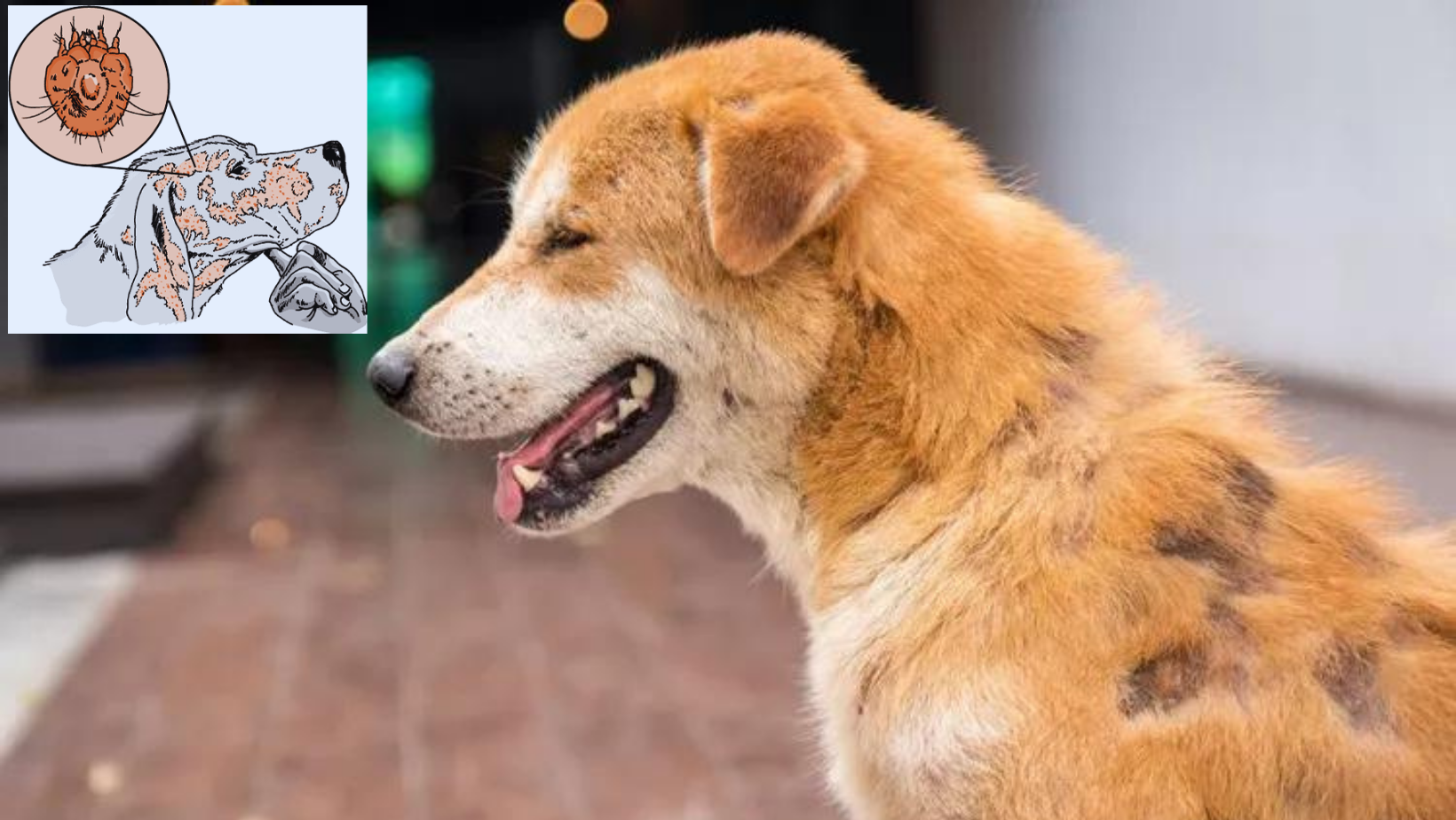
- 12 Apr 2024
Why is it in the News?
The forest department is monitoring an outbreak of mange among a pack of Asiatic wild dogs in the Mudumalai Tiger Reserve (MTR) in the Nilgiris, which they strongly suspect has spread to the animals through the local feral dog population.
What is Mange Disease?
- Mange is a distressing skin condition that affects dogs and is caused by microscopic parasites and different types of mites that infest the dog's skin and coat.
- The two most common forms of mange in dogs are Sarcoptic mange (caused by Sarcoptic scabies mites) and Demodectic mange (caused by Demodex Canis mites).
- Sarcoptic Mange- Scabies: Sarcoptic mange is highly contagious and can spread from dog to dog through direct contact. These microscopic mites burrow into the dog's skin, leading to intense itching and discomfort.
- Demodectic Mange: Demodectic mange, on the other hand, is not usually contagious and often results from an overgrowth of naturally occurring Demodex mites. A weakened immune system or genetic factors can contribute to the development of this form of mange.
- Common Symptoms of Mange in Dogs include:
- Intense Itching
- Skin Infections
- Crusty or Scaly Skin
- Ear Problems
- Mange in dogs is a treatable condition when detected early and managed appropriately.
About Mudumalai Tiger Reserve (MTR):
- The Mudumalai Tiger Reserve, nestled in Tamil Nadu's Nilgiris District at the tri-junction of Karnataka, Kerala, and Tamil Nadu, holds ancient significance, dating back 65 million years to the formation of the Western Ghats.
- It shares borders with the Wayanad Wildlife Sanctuary (Kerala) to the West and the Bandipur Tiger Reserve (Karnataka) to the.
- The Theppakadu Elephant Camp within the reserve is a popular tourist spot, boasting a rich variety of flora and fauna, including Elephants, Gaurs, Tigers, Panthers, and various deer species.
- This historic elephant camp, established over a century ago, sits on the banks of the Moyar River, serving vital roles in human-wildlife conflict resolution, monsoon patrolling, eco-tourism, elephant conservation, and education.
Sungrazing Comet

- 12 Apr 2024
Why is it in the News?
A tiny "sungrazer" comet was discovered, photographed, and destroyed during the recent total solar eclipse — all within 24 hours.
What is a Sungrazing Comet?
- Sungrazing comets are a special class of comets that come very close to the sun at their nearest approach, a point called perihelion.
- To be considered a sungrazer, a comet needs to get within about 850,000 miles from the sun at perihelion.
- Many come even closer, even to within a few thousand miles.
- Being so close to the sun is very hard on comets for many reasons.
- They are subjected to a lot of solar radiation which boils off their water or other volatiles.
- The physical push of the radiation and the solar wind also help form the tails. As they get closer to the sun, the comets experience extremely strong tidal forces or gravitational stress.
- In this hostile environment, many sungrazers do not survive their trip around the sun.
- Although they don't crash into the solar surface, the sun can destroy them anyway.
- Many sungrazing comets follow a similar orbit, called the Kreutz Path, and collectively belong to a population called the Kreutz Group.
- Close to 85% of the sungrazers seen by the SOHO satellite are on this orbital highway.
- Scientists think one extremely large sungrazing comet broke up hundreds, or even thousands, of years ago, and the current comets on the Kreutz Path are the leftover fragments of it.
- Comet Lovejoy, which reached perihelion on December 15, 2011, is the best-known recent Kreutz-group sungrazer.
- And so far, it is the only one that NASA's solar-observing fleet has seen survive its trip around the sun.
What is a Comet?
- A comet is a small celestial body made primarily of ice, dust, and rocky material that orbits the sun in an elongated path.
- When a comet approaches the sun, the heat causes the ice to vaporize, releasing dust and gas into a glowing coma, or halo, around the comet's nucleus.
- This glowing coma often forms a tail that stretches away from the sun due to the solar wind and radiation pressure.
- Comets are often referred to as "dirty snowballs" or "icy dirtballs" because of their composition.
- They are believed to be remnants from the early formation of the solar system and carry important information about its history.
- Comets can have highly elliptical orbits, sometimes taking thousands or even millions of years to complete a single orbit around the sun.
Invasive Alien Species
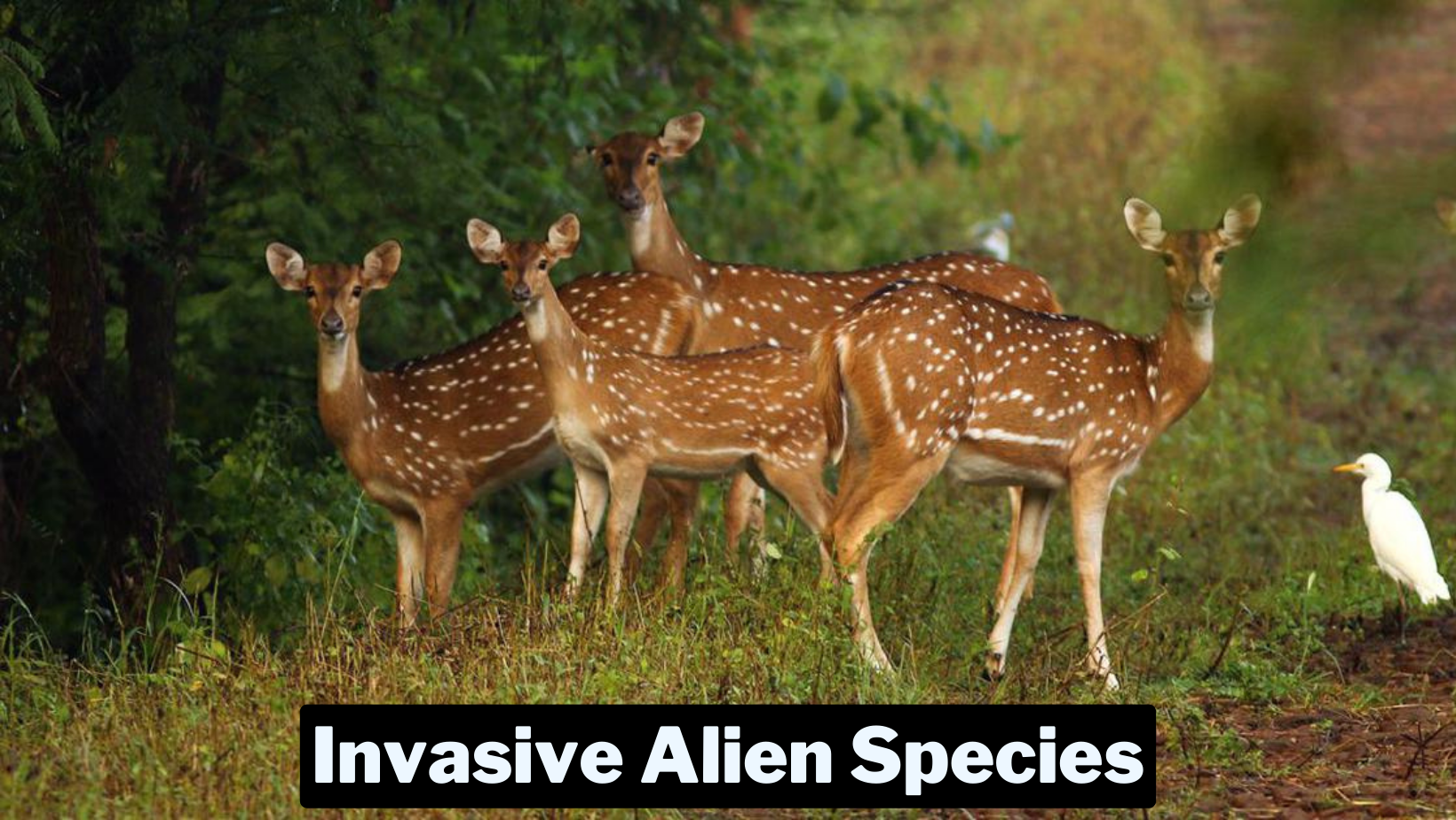
- 11 Apr 2024
Why is it in the News?
In a bid to manage the teeming population of chital (spotted deer) in Ross Island (officially known as the Netaji Subhash Chandra Bose Island), the Andaman and Nicobar Islands administration recently sought help from the Wildlife Institute of India.
What are Invasive Alien Species (IAS)?
- According to the Convention on Biological Diversity (CBD), Invasive alien species are plants, animals, pathogens, and other organisms that are non-native to an ecosystem, and which may cause economic or environmental harm or adversely affect human health.
- In particular, they impact adversely upon biodiversity, including the decline or elimination of native species - through competition, predation, or transmission of pathogens - and the disruption of local ecosystems and ecosystem functions.
- Invasive alien species, introduced and/or spread outside their natural habitats, have affected native biodiversity in almost every ecosystem type on Earth and are one of the greatest threats to biodiversity.
- Since the 17th century, invasive alien species have contributed to nearly 40% of all animal extinctions for which the cause is known (CBD, 2006).
- The problem continues to grow at great socio-economic, health, and ecological costs around the world.
- Invasive alien species exacerbate poverty and threaten development through their impact on agriculture, forestry, fisheries, and natural systems, which are an important basis of people’s livelihoods in developing countries.
- This damage is aggravated by climate change, pollution, habitat loss, and human-induced disturbance.
What are Some Examples of Invasive Wildlife in India?
- The list of invasive wildlife in India is dominated by certain species of fish such as the African catfish, Nile tilapia, red-bellied piranha, and alligator gar, and turtle species such as the red-eared slider.
- The red-eared slider, for instance, is a favorite among India’s exotic pet owners, and many have been abandoned in local water bodies.
- This turtle, native to North America, notoriously edges out local freshwater species, owing to its fast rates of reproduction, and the following competition for food.
- With regards to species of fish, many were introduced in India to feed the demand for those maintaining aquariums.
- For instance, the African catfish was brought over from Bangladesh specifically for aquaculture purposes. “
- The occurrence of C gariepinus (the species’ scientific name) has been reported from several inland systems of India including the mighty rivers like Ganga, Yamuna, Sutlej, Godavari, Periyar River, and the lakes like Vembanad Lake.
How do IAS Impact Native Flora and Fauna?
- The invasive species act as disruptors in the food chain and disturb the balance of the ecosystem.
- In habitats where there is no competition, invasive species can dominate the entire ecosystem
- For instance, “in Keoladeo Park, Bharatpur in Rajasthan, which is a UNESCO World Heritage site, the African catfish have been known to prey on waterfowls and migratory birds as well.
- Studies have shown that the proliferation of chital in the Andamans has affected the regeneration of native vegetation, as the deer are known to consume seeds and seedlings.
National Investment and Infrastructure Fund (NIIF)
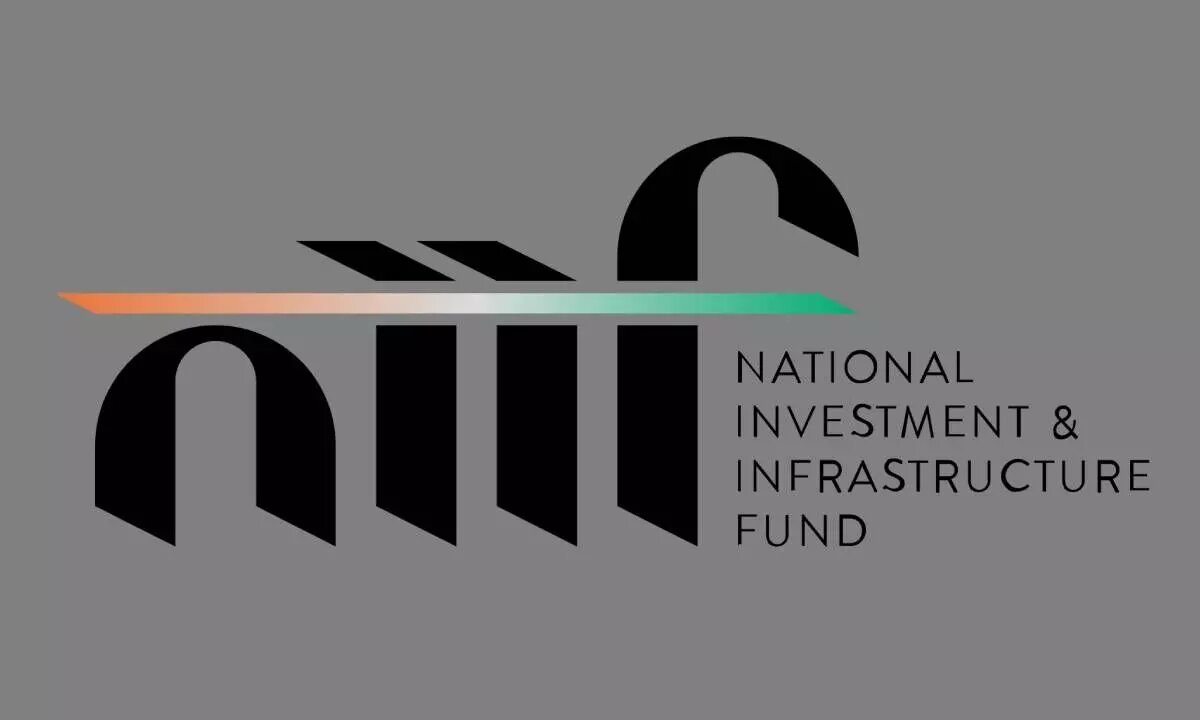
- 11 Apr 2024
Why is it in the News?
iBUS, a digital infrastructure solutions company, said recently it has raised $200 million from the government-backed National Investment and Infrastructure Fund Limited (NIIF).
What is the National Investment and Infrastructure Fund (NIIF)?
- The National Investment and Infrastructure Fund (NIIF) stands as a pioneering fund manager dedicated to investing in India's infrastructure and related sectors.
- Established in 2015, NIIF marks India's inaugural sovereign wealth fund (SWF), embodying a collaborative investment platform for both international and domestic investors.
Key Aspects of NIIF:
- Investment Mandate: NIIF operates with a mandate to deploy equity capital into domestic infrastructure projects, spanning greenfield, brownfield, and stalled ventures.
- Its investment horizon extends across diverse asset classes, including infrastructure, private equity, and other sectors, all aimed at delivering attractive risk-adjusted returns.
- Ownership and Independence: With 49% ownership by the Indian government, NIIF boasts over $4.9 billion in assets under management, solidifying its status as the nation's largest infrastructure fund.
- Despite its close ties with the government, NIIF maintains autonomy in its investment decisions, ensuring a professional and impartial approach to its operations.
- Professional Management: The fund is predominantly owned by institutional investors and managed by a proficient team with expertise in both investments and infrastructure.
- This professional oversight ensures the strategic deployment of capital and efficient management of investments.
- Regulatory Compliance: NIIF operates within the regulatory framework as an Alternative Investment Fund (AIF) registered with the Securities Exchange Board of India (SEBI).
- It actively raises capital from a spectrum of domestic and international institutional investors, further bolstering its financial resources.
NIIF manages capital through four distinct funds:
- NIIF Master Fund: Focused on infrastructural projects such as roads, ports, airports, and power, it stands as India's largest infrastructure fund.
- NIIF Private Markets Fund: Invests in infrastructure and associated sectors through third-party managed funds.
- NIIF Strategic Opportunities Fund: Devoted to developing large-scale businesses and greenfield projects deemed strategically significant for the nation.
- India-Japan Fund: NIIF's bilateral initiative aimed at environmental preservation in India, with contributions from both the Indian government and the Japan Bank for International Cooperation.
- NIIF catalyzes fostering sustainable infrastructure development in India while facilitating fruitful collaborations between Indian and international stakeholders, exemplifying a robust model for investment-driven growth.
QS World University Rankings
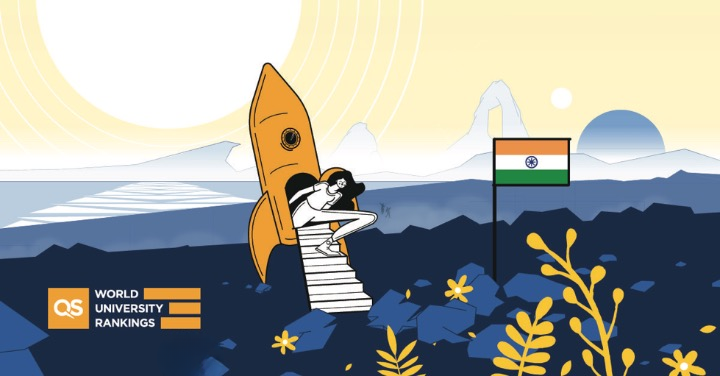
- 11 Apr 2024
Why is it in the News?
Sixty-nine Indian universities made it to the rankings with 424 entries in the 2024 QS World University Rankings by Subject. This marks a 19.4 percent rise from the previous year’s 355 entries.
About QS World University Rankings:
- The QS World University Rankings, curated annually by Quacquarelli Symonds, are a comprehensive assessment of the world's top 1,000 universities.
- In the latest 2024 edition, universities were meticulously evaluated across 55 specific subjects and five broader subject areas, offering a nuanced perspective on academic excellence.
Key Highlights from the 2024 Rankings:
- Massachusetts Institute of Technology (MIT) maintains its prestigious position as the top-ranked university globally for the 12th consecutive year, a testament to its enduring academic prowess.
- The Indian Institute of Technology Bombay (IITB) shines as the leading Indian institution, securing the 149th spot on the global stage.
- Noteworthy Progress: India demonstrates remarkable advancement with a total of 69 universities making their mark in the QS rankings, showcasing a notable 19.4% increase from the previous year.
- India stands as the second most represented country in Asia, highlighting its growing significance in the global academic landscape.
- Jawaharlal Nehru University (JNU) emerges as a standout, clinching the 20th position globally in development studies, reaffirming its commitment to excellence in specialized fields.
- India's Rise in Research: The nation exhibits a commendable 20% improvement in the Citations per Paper indicator, underscoring its burgeoning research capabilities.
- With a staggering 1.3 million academic papers produced, India emerges as the world's fourth-largest contributor to research, trailing only behind academic powerhouses like China, the United States, and the United Kingdom.
- Challenges Ahead: Despite significant strides, India grapples with the challenge of securing citations in premier global journals, with only 15% of its research receiving recognition in these esteemed publications between 2017 and 2021.
- Overall, India's journey in the QS World University Rankings reflects a narrative of progress, innovation, and resilience, while also highlighting areas for continued growth and enhancement in the global academic arena.
African Baobab Tree

- 11 Apr 2024
Why is it in the News?
In a groundbreaking conservation endeavor, the Global Society for the Preservation of Baobabs and Mangroves (GSPBM) has initiated a mission to rejuvenate the iconic Baobab trees.
About the African Baobab Tree:
- African baobab trees, scientifically known as Adansonia Digitata, are some of the oldest living organisms in the world.
- Baobab trees originated millions of years ago in West Africa and spread over time to other parts of the world, creating new species.
- There are 9 baobab species, of which 6 have originated in Madagascar, 2 in Australia, and 1 in Africa.
- These trees range in height from 5 to 20 meters and are typically found in deciduous forests composed primarily of broad-leaved trees that shed their leaves during one season.
- It is one of nine species of baobab, is native to mainland Africa, and also thrives in the African savanna ecosystem.
- The savanna features warm temperatures year-round and experiences its highest seasonal rainfall in the summer.
- It is characterized by grasses and dispersed trees, allowing ample sunlight to reach the ground.
- Age Record: Carbon-14 dating has revealed that an African baobab specimen in Namibia is approximately 1,275 years old, making it the oldest known angiosperm tree.
- Tree of Life: African baobabs, being succulents, absorb and store water in their expansive trunks during the rainy season.
- This unique adaptation enables them to produce nutrient-dense fruit during the dry season, even in arid environments.
- Utilization: Baobab trees, with lifespans exceeding a thousand years, offer a multitude of benefits including food, fodder for livestock, medicinal compounds, and raw materials for various purposes.
- Threats: Since 2005, nine of the thirteen oldest African baobab specimens and five of the six largest trees have either perished or experienced significant decline, possibly due to the impacts of climate change.
What are Angiosperms?
- Angiosperms, a taxonomic class of plants, are characterized by seeds enclosed within an ovule, such as those found in apples.
- This group is commonly known as hardwoods.
- Angiosperms typically comprise trees with broad leaves that undergo color changes and shed annually during autumn.
- Examples of deciduous angiosperms include oaks, maples, and dogwoods. However, certain angiosperms, such as rhododendrons, live oaks, and sweet bay magnolias, retain their leaves.
Gymnosperms:
- Gymnosperms, another taxonomic class, encompass plants with seeds not enclosed in an ovule, as seen in pine cones.
- The term "gymnosperm" translates to "naked seed," and this group is often referred to as softwoods.
- Gymnosperms commonly feature needle-like leaves that remain green throughout the year. Examples include pines, cedars, spruces, and firs.
- While many gymnosperms maintain their foliage year-round, some, like ginkgos, dawn redwoods, and bald cypresses, do shed their leaves.
Sulthan Bathery
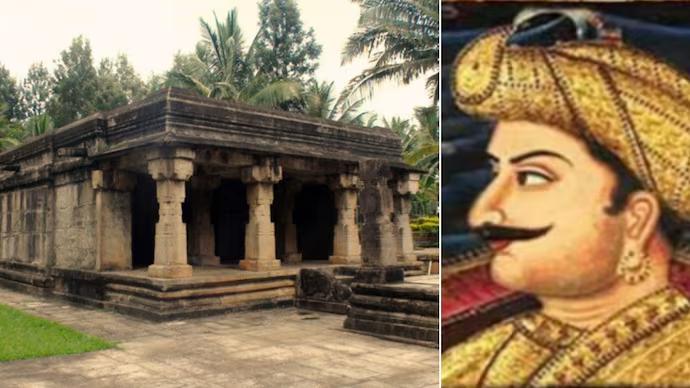
- 11 Apr 2024
Why is it in the News?
BJP suggests renaming Sulthan Bathery to Ganapathivattam due to historical identity alteration by Tipu Sultan.
Where Does the Name Ganapathyvattam Come From?
- Sulthan Bathery, one of the three municipal towns in Wayanad has a stone temple that was once known as Ganapathyvattam.
- The temple, built in the prevalent architectural style of the Vijayanagar dynasty, was constructed by Jains who migrated to Wayanad from areas in present-day Tamil Nadu and Karnataka in the 13th century.
- The temple was partly destroyed during the invasions of Tipu Sultan, the ruler of Mysuru in the second half of the 18th century.
- Between 1750 and 1790, today’s northern Kerala was invaded several times by the rulers of Mysuru, Hyder Ali and his son Tipu.
- It remained abandoned for nearly 150 years.
- Later, it was taken over by the Archaeological Survey of India, which declared it as a monument of national importance.
- The town of Ganapathyvattam, on the route between Mysore and the ports of the Arabian Sea, also gained prominence as a trading center and a stopover.
The History of Sultan Bathery:
- The armies of Tipu destroyed temples and churches and forced many in the path of the invasion to flee to escape forced religious conversion.
- Tipu Sultan used the Maha Ganapathy temple in Sulthan Bathery as a battery or store for weapons for his army in the Malabar region (today’s North Kerala, including Wayanad).
- This led to the British recording Ganapathyvattam as “[Tipu] Sultan’s Battery”, and the name survived as Sulthan Bathery.
Higgs Boson

- 10 Apr 2024
Why is it in the News?
Peter Higgs, the eminent theoretical physicist who first proposed the idea of what we now know as the “Higgs Boson,” died at the age of 94 on April 8.
What is the Higgs Boson?
- Particles make up everything in the universe but they did not have any mass when the universe began.
- They all sped around at the speed of light, according to the European Council for Nuclear Research (CERN).
- CERN, the European Council for Nuclear Research, is where the Large Hadron Collider (LHC) is located, and it's where the discovery of the Higgs Boson was made in 2012 through experiments conducted at the LHC.
- Everything we see like planets, stars, and life, emerged after particles gained their mass from a fundamental field associated with the particle known as the Higgs boson.
- The particle has a mass of 125 billion electron volts making it 130 times bigger than a proton?, according to CERN.
- Interestingly, the subatomic particles known as bosons are named after Indian Physicist Satyendra Nath Bose.
How does the Higgs Boson Work?
- The Higgs boson is a fundamental component of a theory formulated by Higgs and colleagues in the 1960s to elucidate how particles acquire mass.
- According to this theory, a pervasive Higgs energy field permeates the universe.
- As particles traverse this field, they interact with and draw in Higgs bosons, which congregate around the particles in varying quantities.
- Likewise, envision the universe akin to a party: less prominent guests can swiftly traverse the room without notice, while more popular guests attract clusters of people (the Higgs bosons), thus decelerating their movement through the room.
- Similarly, particles navigating the Higgs field experience a comparable phenomenon.
- Certain particles attract larger assemblies of Higgs bosons, and the more Higgs bosons a particle draws in, the greater its mass becomes.
Why is the Higgs Boson Called the “God Particle?”
- The Higgs boson is popularly known as the "God Particle".
- The name originated from Nobel Prize-winning physicist Leon Lederman's book on the particle which he titled the "Goddamn Particle", owing to frustration over how difficult it was to detect.
- However, his publishers changed the name to "The God Particle", which often draws ire from religious communities.
Who was Peter Higgs?
- Born in UK's Newcastle upon Tyne in 1929, Mr Higgs studied at King's College in London and has taught at the University of Edinburgh since the 1950s.
- Described as a modest man who published only a few scientific papers, he disliked his sudden fame calling it "a bit of a nuisance", even cringing when the term "Higgs boson" was used.
- Even as a lifelong atheist, he disliked the name "God particle".
- In 2013, Higgs and Francois Englert won the Physics Nobel Prize for their work on the particle which was thought to be a key to explaining the universe.
CDP-SURAKSHA
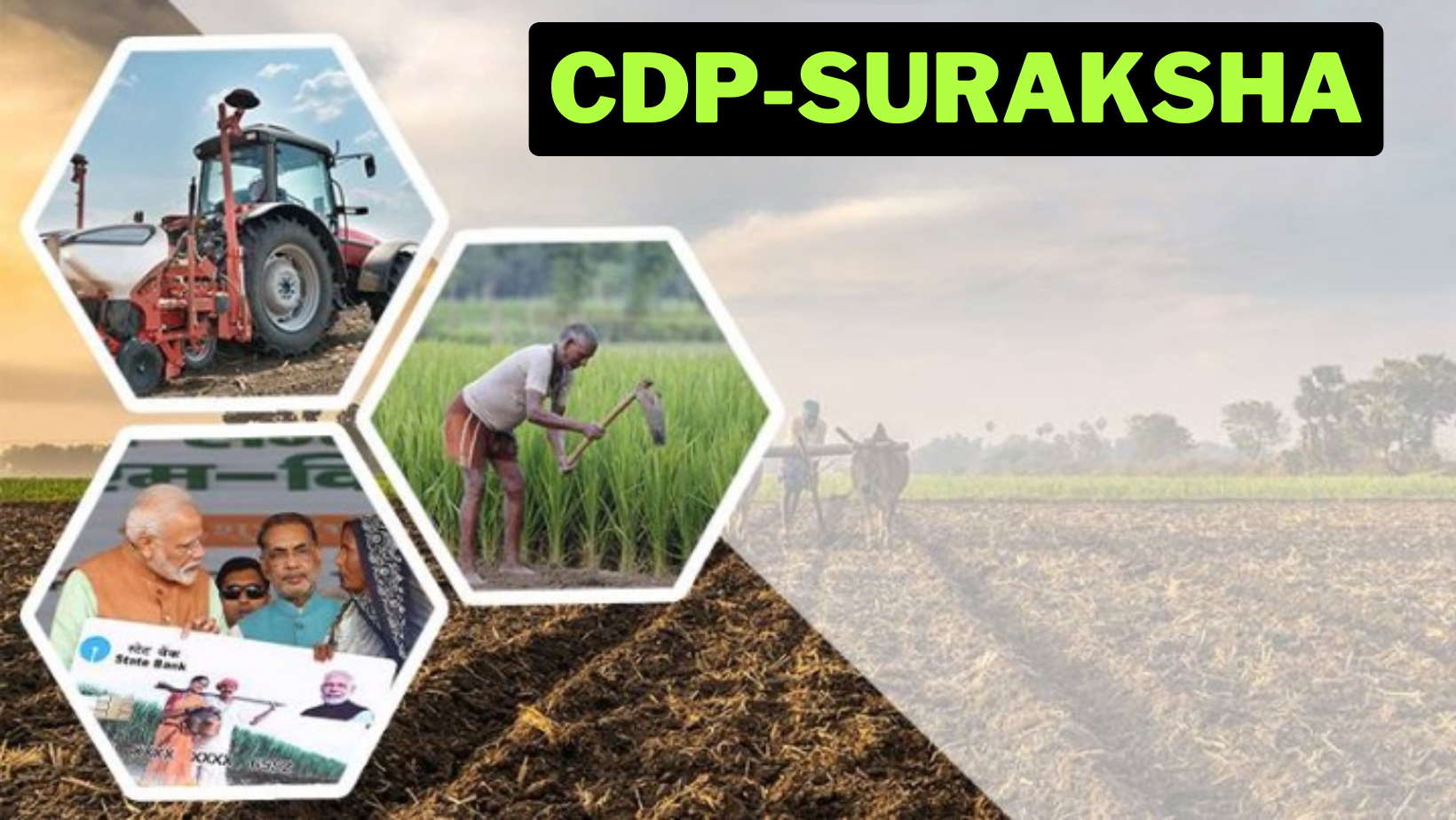
- 10 Apr 2024
Why is it in the News?
The government has come up with a new platform to disburse subsidies to horticulture farmers under the Cluster Development Programme (CDP) — the Centre’s initiative to promote horticulture crops.
What is the CDP-SURAKSHA?
- The CDP-SURAKSHA is essentially a digital platform.
- SURAKSHA stands for “System for Unified Resource Allocation, Knowledge, and Secure Horticulture Assistance.”
- The platform will allow an instant disbursal of subsidies to farmers in their bank accounts by utilizing the e-RUPI voucher from the National Payments Corporation of India (NPCI).
- The CDP-SURAKSHA has features such as database integration with PM-KISAN, cloud-based server space from NIC, UIDAI validation, eRUPI integration, local government directory (LGD), content management system, geotagging, and geo-fencing.
How does the CDP-SURAKSHA work?
- The platform allows access to farmers, vendors, implementing agencies (IA), cluster development agencies (CDAs), and officials of the National Horticulture Board (NHB).
- A farmer can log in using their mobile number and place an order for planting materials such as seeds, seedlings, and plants based on their requirement.
- Once the demand has been raised by the farmer, the system will ask them to contribute their share of the cost of planting material.
- The subsidy amount paid by the government will appear on the screen automatically.
- After the farmer pays their contribution, an e-RUPI voucher will be generated.
- This voucher will then be received by a vendor, who will provide the required planting material to the farmer.
- Once the ordered planting material is delivered to the farmer, they have to verify the delivery through geo-tagged photos and videos of their field.
- It is only after the verification that the IA will release the money to the vendor for the e-RUPI voucher.
- The vendor will be required to upload an invoice for the payment on the portal.
- The IA will collect all the documents and share them with the CDA for subsidy release, then only the subsidy will be released to the IA.
- However, the farmer, who raised the demand for the plant material using the platform, can avail of the subsidy at the first stage only.
What is e-RUPI?
- The CDP-SURAKSHA platform uses e-RUPI vouchers from the NPCI.
- The voucher is a one-time payment mechanism that can be redeemed without a card, digital payments app, or internet banking access, at the merchants accepting e-RUPI.
- According to the NPCI, the e-RUPI can be shared with the beneficiaries for a specific purpose or activity by organizations or government via SMS or QR code.
What is the Cluster Development Program (CDP)?
- The CDP is a component of the central sector scheme of NHB.
- It is aimed at leveraging “the geographical specialization of horticulture clusters and promoting integrated and market-led development of pre-production, production, post-harvest, logistics, branding, and marketing activities.”
- So far, 55 horticulture clusters have been identified, out of which 12 have been selected for the pilot.
- These clusters are in different stages of development.
- Four more clusters:
- A floriculture cluster in West Bengal
- Coconut clusters in Kerala and Tamil Nadu, and
- White onion clusters in Gujarat
- Each cluster will have an implementing agency and a cluster development agency (CDA).
- According to the government, about 9 lakh hectares of area will be covered through all 55 clusters, covering 10 lakh farmers.
- It is estimated that the initiative will attract private investment of Rs 8,250 crore, in addition to the government’s assistance, which is fixed according to the size of the cluster, up to Rs 25 crore for mini cluster (size up to 5,000 ha), up to Rs 50 crore for medium clusters (5,000 to 15,000), and up to Rs 100 crore for mega clusters (more than 15,000 ha).
C-Dome Defense System
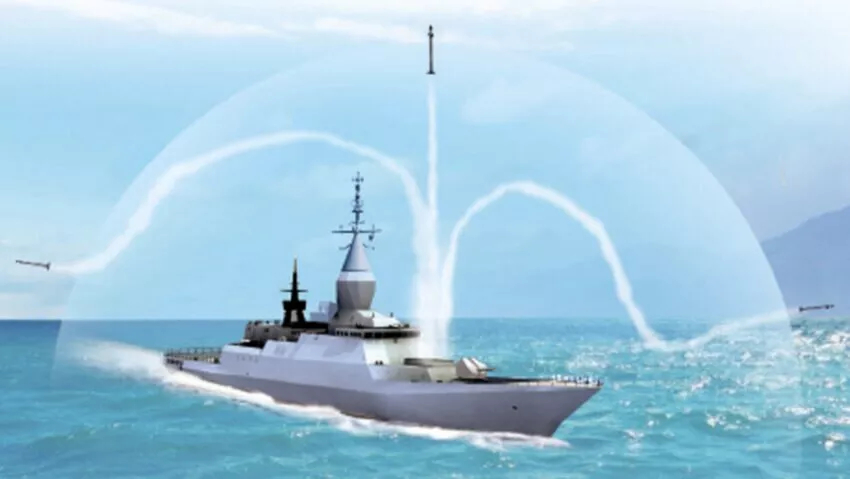
- 10 Apr 2024
Why is it in the News?
Israel for the first time used a seaborne missile defense system to shoot down a drone approaching from the Red Sea that had set off sirens in the port city of Eilat.
What is the C-Dome Defense System?
- The C-Dome is a naval version of Israel's Iron Dome air defense system, designed to protect against rocket and missile attacks.
- Drawing from Iron Dome's technology, C-Dome shares its 90% effectiveness rate and utilizes radars to detect and destroy short-range rockets with its missiles.
Operational Deployment and Integration:
- First unveiled in 2014 and declared operational in 2022, the C-Dome is mounted on Sa'ar 6-class corvettes and German-made warships.
- It employs the same interceptor as the Iron Dome but differs in its integration with the ship's radar for target detection, ensuring full-circular vessel protection.
Combatting Modern Threats:
- C-Dome's primary objective is to counter a wide range of modern maritime and coastal threats with high kill probability.
- Its successful deployment and performance underscore its pivotal role in safeguarding Israel's naval interests and assets against evolving security challenges.
About Iron Dome:
- Developed by Rafael Advanced Defense Systems and Israel Aerospace Industries, the Iron Dome is a cutting-edge air missile defense system that offers protection against short-range rockets by intercepting them above Israeli territory.
- With its multi-rocket handling capacity, Iron Dome became operational in 2011 and features:
- All-weather capabilities for day and night functionality
- Launching versatility with various interceptor missiles
- A range of approximately 40 miles
- Portable design for deployment on ships or land
- Adaptive defense through reloadable interceptors
Iron Dome consists of three key elements:
-
- Radar system for detecting incoming rockets
- Command-and-control mechanism to evaluate threat levels
- Interceptors are designed to neutralize incoming rockets before impact
- These components work in tandem to provide Israel with a robust and reliable defense against aerial threats.
India Imposed Import Restrictions on Solar PV Cells

- 10 Apr 2024
Why is it in the News?
Recent government orders on attempts to increase local sourcing of solar modules to support India’s renewables manufacturing ecosystem have been widely reported in the media as ‘import restrictions’.
What is the Approved List of Models and Manufacturers (ALMM) List?
- The Approved List of Models and Manufacturers of Solar Photovoltaic Modules (ALMM) comprises government-approved manufacturers eligible for use in government projects, government-assisted projects, and schemes.
- ALMM aims to boost the domestic solar industry and reduce dependence on imports, particularly from China.
ALMM's Suspension and Reinstatement:
- The ALMM was kept in abeyance for two years to address concerns raised by renewable energy producers with pre-existing government contracts.
- During this period, India's domestic solar industry struggled to compete with cheap Chinese imports.
- To support local manufacturers, the government launched initiatives like the Production Linked Incentive (PLI) scheme under the Atmanirbhar Bharat ('Self-Reliant India') Programme.
- With the PLI scheme enhancing the competitiveness of Indian manufacturers, the ALMM was reinstated in March 2024.
- The government believes that domestic companies can now meet India's solar equipment demand, making the ALMM an essential tool for promoting import substitution and self-reliance in the renewable energy sector.
Solar PV Imports:
- India heavily relies on solar cell and module imports, with China and Vietnam being the primary suppliers.
- Government data reveals that India imported approximately $11.17 billion worth of solar cells and modules over the past five years.
- As of 2023-24, China accounted for 53% of solar cell imports and 63% of solar PV modules.
China's Competitive Edge:
- Several factors contribute to China's dominance in solar PV exports:
- Cost-effective manufacturing due to lower power costs
- Government policies prioritizing the solar PV sector
- Economies of scale and continuous innovation driven by growing domestic demand
- These advantages have made China the most cost-competitive location for producing solar PV components, making it challenging for other countries to match their production capabilities.
What is the Scope of Solar Energy in India?
- India's solar sector holds immense potential, driven by the government's target of achieving 500 GW of installed non-fossil fuel capacity by 2030.
- Moreover, the country's rapid growth in electricity demand, fueled by economic activities and climate adaptation measures, positions solar power as a critical resource.
- Solar energy accounted for one-third of renewable energy generation from April 2023 to February 2024, showcasing its significance in India's energy mix.
- Despite an estimated solar power potential of 748.99 GW, the country has yet to fully exploit this resource.
- To harness this potential, the government is implementing various schemes and programs, paving the way for a sustainable and prosperous solar future.
Coordinated Lunar Time (LTC)

- 10 Apr 2024
Why is it in the News?
Recently, the US White House has officially instructed NASA to create a lunar time standard for international and private sector coordination on the Moon.
What is Coordinated Lunar Time (LTC)?
- Coordinated Lunar Time (LTC) is a lunar-based time system being developed by NASA in collaboration with other government agencies to establish a standardized time zone for the Moon.
- LTC aims to provide a precise timekeeping benchmark for lunar spacecraft and satellites, synchronizing communication between astronauts, bases, and Earth.
Importance of LTC:
- As lunar exploration and commerce expand, a unified time standard becomes essential for managing operations, ensuring transaction reliability, and coordinating logistics.
- Furthermore, LTC addresses the discrepancy in timekeeping between Earth and the Moon due to differences in gravity, as time ticks faster on the Moon, causing Earth-based clocks to lose an average of 58.7 microseconds per day.
- Establishing LTC will prevent potential problems in spacecraft docking, data transfer, communication, and navigation.
How Will a Lunar Time Standard Be Established?
- Like on Earth, atomic clocks can be deployed on the lunar surface to set a time standard.
- These clocks have to be placed on the Moon at different locations since the Moon’s rotation and even local lumps of mass, called mascons, beneath the crust of the Moon affect the flow of time ever so slightly.
- Mascons or mass concentrations are so dense that they alter the Moon’s local gravity field.
- These effects are minor but the output from these clocks can be synthesized to give the Moon its own independent time, which can be tied back to UTC for seamless operations from Earth as well.
How Does Earth’s Time Standard Work?
- Most of the clocks and time zones of the world are based on Coordinated Universal Time (UTC), set by the International Bureau of Weights and Measures in Paris, France.
- UTC is essentially an internationally agreed-upon standard for world time.
- It is tracked by a weighted average of more than 400 atomic clocks placed in different parts of the globe.
- Atomic clocks measure time in terms of the resonant frequencies — the natural frequency of an object where it tends to vibrate at a higher amplitude — of atoms such as cesium-133.
- In atomic time, a second is defined as the period in which a cesium atom vibrates 9,192,631,770 times.
- As the vibration rates at which atoms absorb energy are highly stable and ultra-accurate, atomic clocks make for an excellent device for gauging the passage of time.
- To obtain their local time, countries must subtract or add a certain number of hours from UTC depending on how many time zones they are away from 0 degree longitude meridian, also known as the Greenwich meridian.
- If a country lies on the west of the Greenwich meridian, it has to subtract from the UTC, and if a country is located on the east of the meridian, it has to add.
Black Swan Event
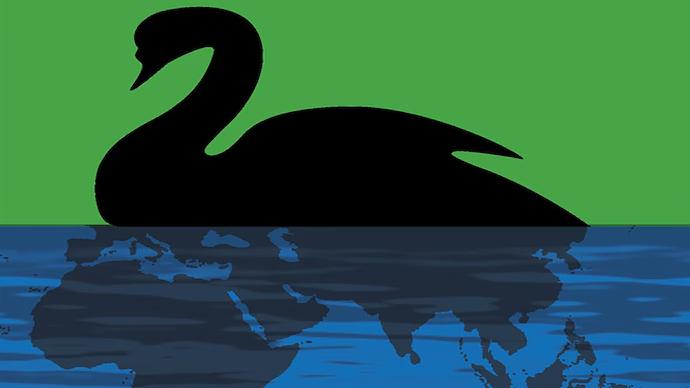
- 09 Apr 2024
Why is it in the News?
Army Chief Gen Manoj Pande on Monday called upon the force to be always prepared for 'black swan' events and "expect the unexpected" even as he identified technology as the new area for strategic competition among nations.
What is the Black Swan Event?
- A black swan is a rare, unpredictable event that comes as a surprise and has a significant impact on society or the world.
- These events are said to have three distinguishing characteristics:
- They are extremely rare and outside the realm of regular expectations
- They have a severe impact after they hit; and
- They seem probable in hindsight when plausible explanations appear.
When did the Term Originate?
- The black swan theory was put forward by author and investor Nassim Nicholas Taleb in 2001 and later popularised in his 2007 book – The Black Swan: The Impact of the Highly Improbable.
- In his book, Taleb does not try to lay out a method to predict such events but instead stresses building “robustness” in systems and strategies to deal with black swan occurrences and withstand their impact.
- The term itself is linked to the discovery of black swans.
- Europeans believed all swans to be white until 1697 when a Dutch explorer spotted the first black swan in Australia.
- The metaphor ‘black swan event’ is derived from this unprecedented spotting from the 17th century, and how it upended the West’s understanding of swans.
Implications of Black Swan Events:
- Black Swan events are characterized by their extreme rarity, severe impact, and widespread implications across various sectors.
- These unanticipated occurrences can trigger substantial disruptions, unveiling vulnerabilities in systems once thought resilient and prompting reassessments of risk management practices.
- Disruption: Black Swan events have the potential to disrupt economies, industries, and societies on a global scale.
- Their unforeseen nature can cause sudden shifts in financial markets, business operations, and everyday life, leaving lasting effects on the overall landscape.
- Uncertainty: The inability to predict Black Swan events using traditional methods injects considerable uncertainty into decision-making and planning for individuals, organizations, and governments.
- Navigating through such unpredictable circumstances can pose significant challenges for all affected parties.
- Vulnerability: These rare events can expose vulnerabilities in systems that were previously thought to be impervious or resilient.
- By doing so, Black Swan events emphasize the importance of preparedness and encourage the development of more robust risk management practices.
- Reassessment of Risk: In the aftermath of a Black Swan event, there is often a renewed focus on identifying and mitigating previously overlooked risks.
- This heightened awareness can lead to changes in investment strategies, regulatory policies, and overall risk management practices.
- Regulatory and Policy Responses: Governments and regulatory bodies may implement new regulations or policies in response to Black Swan events.
- These measures are designed to prevent or mitigate the impact of similar occurrences in the future, ultimately shaping the economic and social landscape.
- Behavioral and Attitude Changes: Black Swan events can significantly alter behaviors and attitudes as individuals and organizations adapt to the new reality.
- These shifts may include changes in consumer behavior, investment strategies, and approaches to risk management.
Examples of Black Swan Events:
- The Dot-com Bubble: In 2000, the valuation of many internet-based companies plummeted after a period of rapid growth.
- The 9/11 Terrorist Attacks: The events of September 11, 2001, had far-reaching consequences on global security, politics, and economies.
- The 2008 Financial Crisis: A series of shocks to Wall Street due to the unraveling of subprime lending practices caused significant economic turmoil.
- Brexit: The unexpected decision of the United Kingdom to leave the European Union in June 2016 caught many by surprise and caused the British pound to plummet against the US dollar.
- COVID-19 Pandemic: The ongoing global health crisis continues to significantly affect economies and markets worldwide.
- These instances illustrate the profound and widespread implications of Black Swan events, underscoring the importance of adaptability and resilience in an ever-changing global landscape.
Imposition of Anti-Dumping Duty on Sodium Cyanide

- 09 Apr 2024
Why is it in the News?
The Directorate General of Trade Remedies (DGTR) has now recommended the imposition of anti-dumping duty on sodium cyanide (NaCN) imported from China, the European Union, Japan, and Korea.
Key Facts About Sodium Cyanide:
- Sodium cyanide (NaCN) is a highly toxic, inorganic compound with a white, crystalline appearance.
- It is a solid at room temperature and has a high affinity for metals, making it useful in various industrial processes.
- Due to its toxic nature, proper handling and safety protocols must be followed when working with sodium cyanide.
Applications of Sodium Cyanide:
- Mining and Metallurgy: Sodium cyanide is widely used in the extraction of gold and silver from ores. It is employed in a technique called "cyanide heap leaching," where a dilute sodium cyanide solution is sprayed onto crushed ore.
- The cyanide forms a water-soluble complex with the precious metals, enabling their recovery from the ore.
- Electroplating: NaCN is utilized as an electrolyte in electroplating processes, particularly for the deposition of silver, gold, and other metals on various surfaces to improve their appearance, durability, or conductivity.
- Synthetic Fiber Production: Sodium cyanide is used in the manufacturing of synthetic fibers such as acrylic and nylon.
- It serves as a catalyst in the polymerization process, promoting the formation of long-chain polymers that make up the fibers.
- Pesticides: Due to its toxicity, sodium cyanide has been used as a fumigant to control pests and rodents.
- However, its use in this field has been largely phased out in many countries due to safety concerns and the development of safer alternatives.
- Dye and Pigment Production: NaCN can be used in the production of certain dyes and pigments, particularly those containing nitrogen.
- It acts as a precursor for the synthesis of these compounds.
What is Anti-Dumping Duty?
- An anti-dumping duty is a tariff imposed by a domestic government on foreign imports suspected of being sold at prices lower than those in the exporter's domestic market.
- This measure aims to prevent these products from undercutting local businesses and harming the local economy.
- The World Trade Organization (WTO) oversees a framework of international trade rules governing anti-dumping measures.
- Under this agreement, governments are permitted to address dumping practices if they pose a threat of significant harm to a domestic industry.
Calculation of Anti-Dumping Duty:
- The calculation of anti-dumping duty involves determining the difference between the normal value and the export value of the product.
- The normal value represents the market value of the product in the exporter's domestic market, while the export value denotes the price at which the product is sold when exported to India.
- The anti-dumping duty is levied to neutralize this price disparity and safeguard the domestic industry from the adverse effects of inexpensive imports.
Anti-Dumping Mechanism in India:
- India's anti-dumping mechanism is overseen by the Directorate General of Anti-Dumping and Allied Duties (DGAD) under the Ministry of Finance.
- The legal framework for anti-dumping in India is established by the Customs Tariff Act of 1975 and the Customs Tariff Rules of 1995.
- The DGAD conducts investigations to assess whether a surge in below-cost imports has negatively impacted the domestic industry.
Mangal Pandey
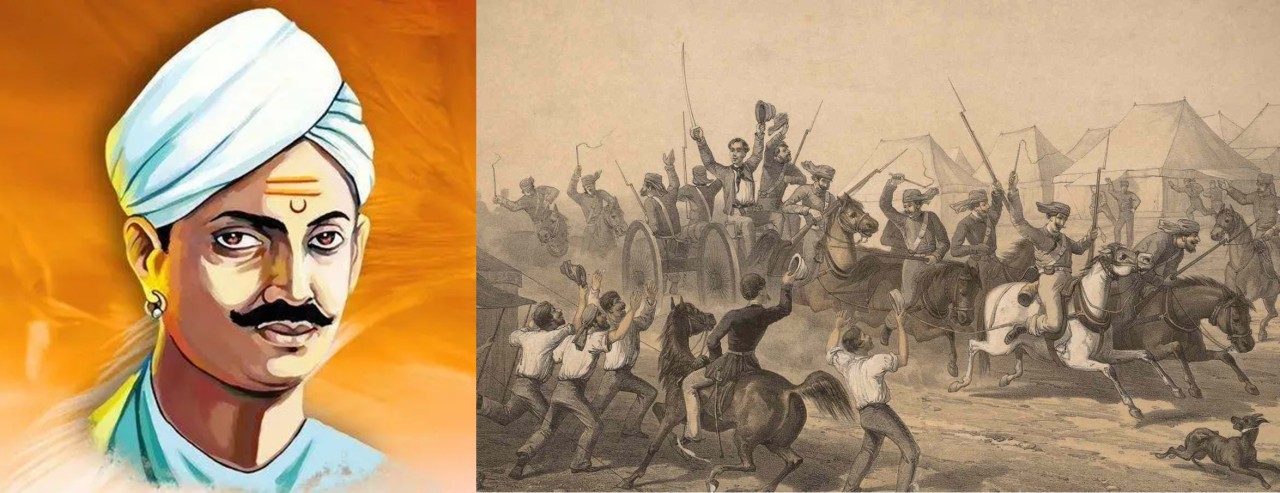
- 09 Apr 2024
Why is it in the News?
Sepoy Mangal Pandey likely didn't anticipate that his shot at the Sergeant Major of his regiment near Kolkata on March 29, 1857, would ignite a significant event in Modern Indian history—the Revolt of 1857, also known as the Sepoy Mutiny or the First War of Indian Independence.
Who was Mangal Pandey?
- Mangal Pandey was a prominent historical figure who played a pivotal role in India's struggle for independence from British colonial rule.
- Born in the kingdom of Awadh, which contributed significantly to the East India Company's army, Mangal Pandey joined the 34th Bengal Native Infantry at the age of 22.
Annexation of Awadh:
- In 1856, the British annexed Awadh in a treacherous act that provoked widespread anger and resentment among the local population.
- The deposition of the Nawab and the subsequent confiscation of villages from the taluqdars during the land revenue settlement of 1856 only exacerbated the situation.
Mangal Pandey's Mutiny and Execution:
- The introduction of the Enfield rifle, which used animal fat (beef and pork) in its cartridges, was met with fierce resistance from soldiers like Mangal Pandey.
- They perceived the use of these cartridges as a direct affront to their religious beliefs.
- On March 29, 1857, Mangal Pandey openly revolted, firing at his Senior Sergeant Major in protest.
- His act of defiance led to his capture, and he was subsequently hanged by order of a Court Martial at Lal Bagan in Barrackpore.
- Mangal Pandey's sacrifice and bravery in the face of British oppression have earned him a lasting place in India's history as a symbol of resistance against colonial tyranny.
The Expansion of the 1857 Revolt and Its Lasting Impact:
- The bravery exhibited by Mangal Pandey inspired a wave of resistance among other soldiers, notably those of the 7th Awadh Regiment.
- On May 11, 1857, a group of Sepoys from Meerut refused to use the new cartridges and killed their European officers, marching to the Red Fort in an act of defiance.
The Legacy of the 1857 Revolt:
- The revolt of 1857 had far-reaching consequences and reshaped the dynamics of British rule in India.
- In response to the growing unrest, the British Parliament passed the Government of India Act in 1858, effectively transferring all powers of the East India Company to the Crown.
- Queen Victoria was subsequently declared the Sovereign of British India.
- The Queen's Proclamation, announced by Lord Canning in 1858, introduced a new policy of perpetual support for the native Princes and pledged non-intervention in matters of religious beliefs in India.
- This policy was further reinforced in 1877 during the Delhi Durbar, where Queen Victoria assumed the title of Qaiser-e-Hind, reflecting her position as the Empress of India.
- The 1857 revolt, sparked by Mangal Pandey's actions, marked a turning point in India's struggle for independence and continues to be remembered as a pivotal moment in the nation's history.
ISRO’s ‘Zero Orbital Debris’ Milestone

- 09 Apr 2024
Why is it in the News?
The rise in satellite launches has led to a new crisis for spacefaring nations: space debris, which ISRO's recent mission successfully mitigated by leaving 'zero orbital debris'.
Context:
- Recently, ISRO announced that its PSLV-C58/XPoSat mission effectively minimized debris in Earth's orbit.
- This achievement was made possible by repurposing the final stage of the PSLV into a novel orbital station termed PSLV Orbital Experimental Module-3 (POEM-3), as outlined by ISRO.
What is POEM?
- POEM, developed by the Vikram Sarabhai Space Centre (VSSC) is a cost-effective space platform, that repurposes the spent fourth stage of a PSLV rocket into an orbital platform.
- It made its debut during the PSLV-C53 mission in 2022, serving as a stabilized platform for conducting in-orbit scientific experiments with various payloads.
- POEM-3, deployed during ISRO's PSLV C-58 mission in 2024, successfully positioned the XPoSat satellite into its targeted 650 km orbit.
- Subsequently, the fourth stage of the PSLV, functioning as POEM-3, was maneuvered to a circular orbit at 350 km altitude.
- Upon completing all payload objectives, POEM-3 re-entered Earth's atmosphere.
Significance of POEM-3's Achievement:
- The significance of POEM-3's achievement lies in its contribution to mitigating space debris, a pressing concern highlighted in ISRO's Space Situational Assessment Report 2022.
- With the world witnessing a surge in space object placement, reaching 2,533 in 179 launches in 2022, the proliferation of space debris poses substantial risks to space assets.
- Furthermore, it exacerbates the 'Kessler syndrome,' wherein cascading collisions from a single event generate additional debris, intensifying the threat to space operations.
International Law Pertaining to Space Debris:
- Regarding international regulation on space debris, presently, there exists no specific international law governing debris in Low Earth Orbit (LEO).
- However, the majority of spacefaring nations adhere to the Space Debris Mitigation Guidelines of 2002, which received endorsement from the UN in 2007.
How are Space Agencies Dealing with Debris?
- Various space agencies are actively addressing the issue of space debris.
- NASA initiated its Orbital Debris Program in 1979, while the European Space Agency (ESA) has committed to a 'Zero Debris charter,' aiming for the elimination of space debris by 2030.
- Japan has launched the Commercial Removal of Debris Demonstration (CRD2) project to confront space junk.
- Additionally, an Indian startup named Manastu Space is developing technologies such as in-space refueling, deorbiting of defunct satellites, and satellite life extension to contribute to debris mitigation efforts.
TSAT-1A Satellite
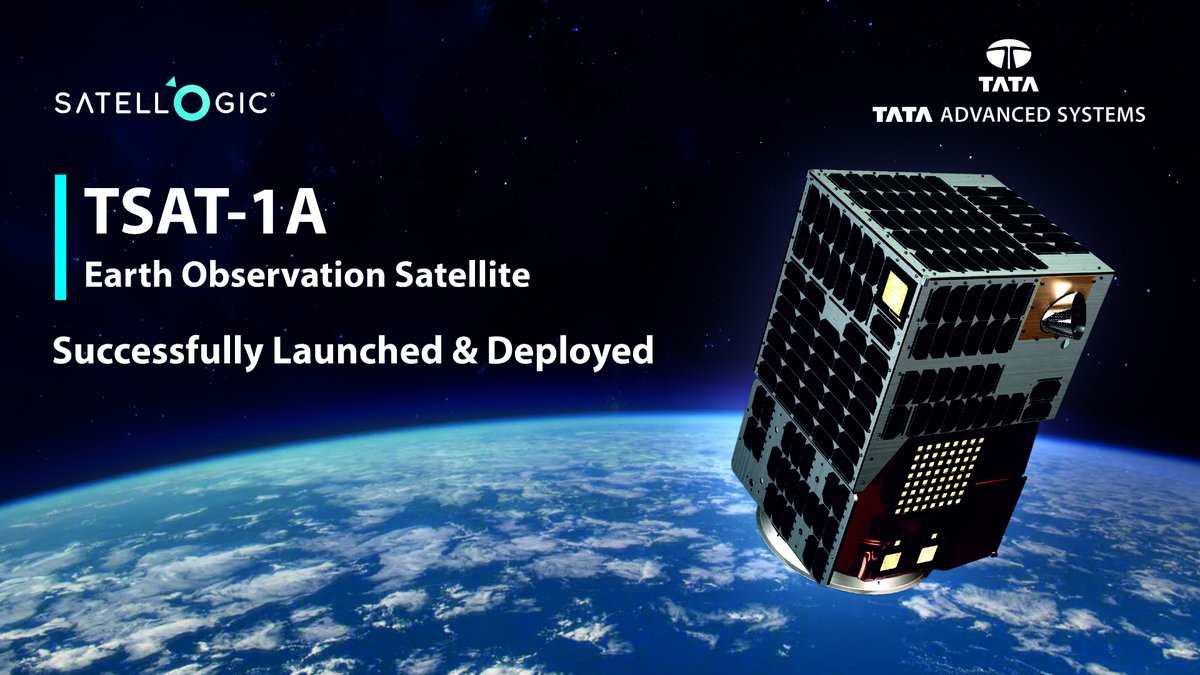
- 09 Apr 2024
Why is it in the News?
SpaceX successfully launched and deployed the TSAT-1A satellite developed by Tata Advanced Systems Limited (TASL) in partnership with Satellogic Inc.
About TSAT-1A Satellite:
- TSAT-1A is a groundbreaking optical sub-meter resolution Earth observation satellite developed by Tata Advanced Systems Limited (TASL) in collaboration with Latin American company Satellogic Inc.
- This collaboration began in late 2023, culminating in TSAT-1A's assembly at TASL's Assembly, Integration, and Testing (AIT) plant in Karnataka, India.
- Launched from the Kennedy Space Center in Florida, United States, via SpaceX's Falcon 9 rocket, TSAT-1A has since garnered attention for its advanced capabilities and strategic significance.
Key Features of TSAT-1A:
- Sub-meter resolution imagery: TSAT-1A's primary strength lies in its ability to capture high-resolution military-grade imagery of Earth's surface, providing precision of less than one meter per pixel.
- Multispectral and hyperspectral imaging: This technology enables TSAT-1A to gather data across a wide range of wavelengths in the electromagnetic spectrum, offering a detailed and nuanced understanding of land, water, and other natural resources.
- Enhanced performance: TSAT-1A offers improved collection capacity, a wider dynamic range, and low-latency data delivery, ensuring efficient and reliable intelligence gathering.
Strategic Applications and Implications:
- Designed for use by Indian defense forces, TSAT-1A is set to play a pivotal role in discreet information gathering, with the potential for data-sharing among friendly nations.
- By enhancing defense forces' preparedness, response capabilities, and strategic decision-making, TSAT-1A represents a significant milestone in India's space industry and a potential game-changer in the realm of defense and security.
About SpaceX's Falcon 9 rocket:
- The Falcon 9 is a partially reusable, two-stage rocket designed and manufactured by SpaceX.
- Known for its reliable and safe transportation capabilities, Falcon 9 is primarily used to launch payloads and crew into Earth orbit.
- Since its first launch in 2010, Falcon 9 has made significant strides in the aerospace industry, becoming the first commercial rocket to launch humans to orbit in 2020 and maintaining a strong safety record with only one flight failure to date.
Solar Eclipse

- 08 Apr 2024
Why is it in the News?
On Monday (April 8), a total solar eclipse will cross North America, passing over Mexico, the United States, and Canada. This type of solar eclipse is a rare event for any particular spot.
What is a Solar Eclipse?
- A solar eclipse takes place when the Moon moves in the middle of Earth and the Sun.
- The Moon blocks the light of the Sun, either fully or partially, which casts a huge shadow on some parts of the world.
There are four different types of solar eclipses, including:
- Total solar eclipse: When the Moon blocks the Sun entirely, the areas in the center of the Moon’s shadow at the time witness a total solar eclipse.
- The sky darkens and people who are in the path of a total solar eclipse can get a glimpse of the Sun’s corona — the outer atmosphere — which is usually not visible due to the bright face of the Sun.
- Annual solar eclipse: When the Moon passes in front of the Sun but is at or near the farthest point from Earth, an annular solar eclipse occurs.
- In this scenario, the Moon covers the Sun in such a way that only the periphery of the Sun remains visible — looking like a ring of fire.
- Partial solar eclipse: A partial solar eclipse takes place when the Moon blocks just a part of the Sun, giving it a crescent shape.
- During both partial and annular eclipses, the regions outside the area covered by the Moon’s umbra — the middle and the darkest part of the lunar shadow — will see a partial solar eclipse.
- Partial solar eclipse is the most common type of solar eclipse.
- Hybrid solar eclipse: A hybrid solar eclipse — the rarest type of solar eclipse — is witnessed when an eclipse shifts between annular and total as the shadow of the Moon moves across the globe.
- In this case, some parts of the world see a total solar eclipse, while others observe an annular solar eclipse.
How Often Does a Solar Eclipse Take Place?
- A solar eclipse is witnessed only during the new moon — when the Moon and Sun are aligned on the same side of Earth.
- A new moon occurs about 29.5 days because that is how long it takes the Moon to orbit Earth.
- This, however, does not mean that a solar eclipse happens every month. It takes place only between two to five times annually, because the Moon does not orbit Earth in the same plane as the Earth orbits the Sun.
- In fact, the Moon is tilted by about five degrees with respect to Earth.
- As a result, most of the time when the Moon is in between the Sun and Earth, its shadow is either too high or too low to fall on the Earth.
Why is a Total Solar Eclipse so Rare?
- While there can be between two and five solar eclipses every year, total eclipses only happen about once every 18 months or so.
- This is because a total eclipse is only visible if one is standing in the umbra — the other part of the shadow is called the penumbra, which is not as dark as the umbra.
- The umbral shadow is very small, covering only a small part of Earth.
- In fact, the entire path of the umbral shadow during a solar eclipse will only cover less than one percent of the globe.
- This is why only very few people will get to see a total eclipse at a time.
- Moreover, about 70 percent of the globe is underwater and half of the land is considered uninhabited.
- That’s why, it is quite rare when a total solar eclipse happens and a lot of people get to see it.
Umbra and Penumbra:
- During a solar eclipse, the Moon comes between the Earth and the Sun, casting a shadow on the Earth's surface.
- This shadow consists of two main parts: the umbra and the penumbra.
- The umbra is the central, darkest part of a shadow, such as during a total solar eclipse when the Moon completely covers the Sun.
- The penumbra is the outer part of the shadow where the obscuration is partial, resulting in a partial solar eclipse.
Consumer Confidence Survey (CCS)

- 08 Apr 2024
Why is it in the News?
Consumer confidence for the year ahead has improved further on the back of higher optimism, which resulted in the Future Expectations Index (FEI) rising by 2.1 points to 125.2, the highest level since mid-2019, according to a Reserve Bank of India survey conducted in March 2024.
What is the Consumer Confidence Survey (CCS)?
- The Consumer Confidence Survey (CCS) is a comprehensive assessment conducted by the Reserve Bank of India (RBI) to gauge consumer perceptions of the current economic landscape.
- Administered across various cities, the CCS measures consumer confidence based on key indicators such as economic conditions, employment prospects, price levels, income, and spending patterns.
- The survey collects valuable insights into consumer sentiments by posing a series of questions about both present and future economic scenarios.
- These responses offer a glimpse into consumers' perceptions of the prevailing financial environment, shedding light on economic trends, opportunities, and potential challenges.
- As a vital tool for policymakers, the Consumer Confidence Survey contributes to shaping effective strategies aimed at fostering sustainable economic growth and improving overall financial stability.
Highlights of the Survey:
- The survey revealed optimistic consumer sentiments across all parameters, reflecting a positive outlook on the current and future economic landscape.
- Key indicators, such as the Current Situation Index (CSI) and Future Expectations Index (FEI), showcased significant improvements, reaching their highest levels since mid-2019.
- Current Situation Index (CSI): Measuring overall consumer perception of the present economic situation, the CSI experienced a notable increase of 3.4 points compared to the previous survey, currently standing at 98.5.
- Future Expectations Index (FEI): Evaluating consumer sentiment for the next 12 months, the FEI witnessed a substantial surge, reaching its highest point since mid-2019 and indicating a positive outlook for the upcoming year.
- The CSI and FEI are calculated based on net responses concerning the economic situation, income, spending, employment, and price levels, comparing the current period with one year ago and the anticipated changes in the year ahead, respectively.
- Households’ Inflation Expectation Survey: There was a slight increase in the proportion of households anticipating an overall rise in prices and inflation within the next three months and one year, as observed across general prices and most product categories when compared to the previous survey round.
- Additionally, the survey results revealed noteworthy enhancements in households' perceptions regarding the general economic situation and employment prospects, signaling a sense of optimism for both the current period and the years ahead.
Oceanic Niño Index (ONI)
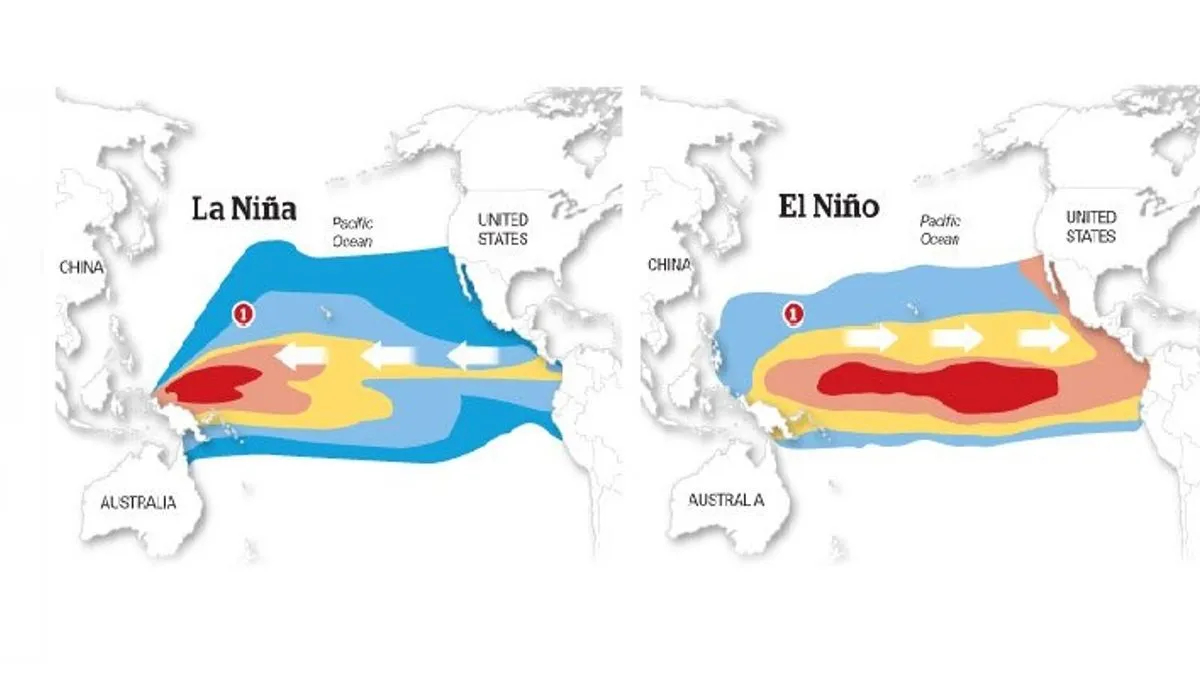
- 08 Apr 2024
Why is it in the News?
The US National Oceanic and Atmospheric Administration (NOAA) has recently forecasted an 83% likelihood that the Oceanic Niño Index (ONI) will move into a neutral range between April and June 2024.
What is the Oceanic Niño Index?
- The Oceanic Niño Index (ONI) is the National Oceanic and Atmospheric Administration's (NOAA) primary indicator for monitoring El Niño and La Niña, which are opposite phases of the climate pattern called the El Niño-Southern Oscillation, or “ENSO” for short.
- NOAA is a US governmental agency responsible for monitoring and researching the Earth's oceans, atmosphere, and climate, and providing weather forecasts and environmental data.
- The ONI is the difference between a three-month running average of the sea surface temperature averaged over an area of the ocean from 120 West to 170 West longitude along the equator and the long-term average for the same three months.
- NOAA considers El Niño conditions to be present when the Oceanic Niño Index is +0.5 or higher, indicating the east-central tropical Pacific is significantly warmer than usual.
- La Niña conditions exist when the Oceanic Niño Index is -0.5 or lower, indicating the region is cooler than usual.
What is El Niño and La Niña?
- El Niño and La Niña are two natural climate phenomena that occur in the Pacific Ocean, characterized by fluctuations in ocean surface temperatures.
- They are part of the El Niño-Southern Oscillation (ENSO) cycle, which impacts global weather patterns.
- El Niño refers to the warming of ocean surface temperatures in the eastern tropical Pacific.
- This warming causes changes in atmospheric pressure and wind patterns, which can lead to drought conditions in parts of South America and heavy rainfall in other regions, such as the southern United States.
- La Niña is the opposite phase of the ENSO cycle, characterized by cooler-than-average ocean surface temperatures in the eastern tropical Pacific.
- This results in the strengthening of normal trade winds, causing increased rainfall in some regions, such as Indonesia and northern Australia, and drier conditions in other areas, including the southwestern United States.
- El Niño refers to the warming of ocean surface temperatures in the eastern tropical Pacific.
Effects of El Niño and La Niña on India:
- Both El Niño and La Niña have significant impacts on India's climate, particularly during the monsoon season.
- El Niño events often lead to weaker monsoon winds and reduced rainfall in India, causing droughts and impacting agricultural production.
- On the other hand, La Niña events typically result in stronger monsoon winds and higher rainfall, leading to better agricultural yields.
- However, excessive rainfall can also cause floods and landslides in some regions.
- Monitoring and predicting the occurrence of El Niño and La Niña events is crucial for India's weather forecasting and agricultural planning.
- Accurate predictions enable authorities to take necessary measures to mitigate potential adverse effects on agriculture and infrastructure.
SUVIDHA Portal

- 08 Apr 2024
Why is it in the News?
The Election Commission said that over 73 thousand applications had been received on the Suvidha Portal in just 20 days since the announcement of General Elections 2024.
About SUVIDHA Portal:
- The Suvidha portal is a technological solution developed by the Election Commission of India (ECI) to ensure a level playing field upholding the democratic principles of free, fair, and transparent elections.
- Suvidha's robust track record showcases its ability to streamline requests for permissions and facilities during election campaigns, catering to diverse needs such as rallies, canvassing, and temporary party offices.
- The Suvidha portal offers both online and offline submission options, ensuring inclusivity and equal opportunity for all stakeholders.
- Permission requests can be processed efficiently through a robust IT platform managed by nodal officers from various state departments.
- The portal's user-friendly design allows political parties and candidates to submit requests from anywhere, at any time.
- To enhance transparency and convenience, Suvidha also provides a companion app for real-time tracking of application statuses.
- Available on both iOS and Android platforms, the app ensures a seamless user experience.
- Moreover, the Suvidha portal promotes accountability by offering features such as real-time tracking, status updates, timestamped submissions, and SMS communication.
- Data collected on the Suvidha platform serves as a valuable resource for scrutinizing election expenditures, thereby promoting greater integrity in the electoral process.
- With Suvidha, the Election Commission of India demonstrates its commitment to facilitating a fair, efficient, and transparent electoral environment, granting equal access to all political parties and candidates seeking permissions and clearances during election campaigns.
Prevention of Money Laundering Act (PMLA)

- 08 Apr 2024
Why is it in the News?
In its manifesto for the Lok Sabha election, the primary opposition party pledged to cease the weaponization of the Prevention of Money Laundering Act (PMLA) if entrusted with power.
About the Prevention of Money Laundering Act:
- The Prevention of Money Laundering Act (PMLA) constitutes the cornerstone of India's legal framework aimed at combating money laundering, with its enactment and enforcement starting from July 1, 2005.
- Enacted by India's Parliament under Article 253, which authorizes legislation for implementing international conventions, the Act has three primary objectives:
- Prevention and control of money laundering
- Confiscation of proceeds derived from laundering, and
- Addressing related issues within India.
- The Act empowers the Director of the Financial Intelligence Unit-India (FIU-IND) and the Director (Enforcement) with exclusive and concurrent powers to enforce its provisions.
- Subsequent amendments were made in 2009 and 2012 through the Prevention of Money Laundering (Amendment) Acts.
What is Money Laundering?
- Money laundering is defined as the process through which an illegal fund, such as black money, is obtained from illegal activities and disguised as legal money, eventually portrayed as white money.
- The money laundered is passed on through various channels or phases of conversions and transfers to make it legal and eventually reach a legally acceptable institution, like a bank.
Brief History of the PMLA:
- In response to the emergence of global terrorism in the 1990s and the subsequent imperative to curb illicit financial flows, international efforts intensified, culminating in the establishment of the Financial Action Task Force (FATF) in 1989 to coordinate anti-money laundering endeavors worldwide.
Legislative Response:
- Against this backdrop, India, as a member of FATF, was prompted to enact domestic legislation to combat money laundering following the United Nations General Assembly's political declaration in 1998 urging member states to implement national anti-money laundering measures.
Enactment Process:
- The initial iteration of the Prevention of Money-Laundering Bill in 1998 was introduced by the NDA government, aiming to address various aspects such as the prevention of money laundering, confiscation of illicit proceeds, and establishment of coordinating agencies.
- However, concerns regarding potential misuse of the proposed law led to bipartisan opposition, prompting referral to the Department-related Standing Committee on Finance.
- Despite deliberations and amendments, the bill was eventually passed by Parliament in 2002, with enforcement commencing in 2005 following the formulation of accompanying rules under the subsequent UPA government.
Significant Amendments in the PMLA:
- Over the years, the Prevention of Money Laundering Act (PMLA) has undergone various revisions, but it was the amendments introduced in 2009 and 2012 that notably empowered the Enforcement Directorate (ED) to take coercive measures against politicians.
- In 2009, amendments expanded the PMLA's scope to include 'Criminal conspiracy' under Section 120B of the Indian Penal Code (IPC), enabling the ED to intervene in cases alleging conspiracy, even if the primary offense isn't listed in the PMLA.
- For instance, this broadening facilitated the ED's pursuit of cases like the land-grabbing accusations against a former Jharkhand CM, currently incarcerated in Ranchi.
- Furthermore, the 2009 amendments granted the ED international jurisdiction for tracking laundered money, enhancing its global reach.
- In 2012, the PMLA was amended to elevate the Prevention of Corruption Act, 1988 (PC Act) to Part A of the statute's schedule from Part B.
- This move imposed stricter bail conditions on corruption suspects, requiring courts to ascertain substantial evidence of guilt if bail opposition arises from the public prosecutor.
- Part A of the schedule encompassed various serious offenses, including acts like waging war against the nation, drug trafficking, and violations of the PC Act, among others.
Supreme Court's Verdicts on the Constitutionality of PMLA:
- In the case of Vijay Madanlal Choudhary & Ors vs Union of India (2022), a three-judge Bench of the Supreme Court upheld the constitutional validity of the Prevention of Money Laundering Act (PMLA), which faced challenges in over 200 individual petitions.
- One of the primary challenges was regarding the creation of an alternative criminal law system by the PMLA, as the Enforcement Directorate (ED) operates outside the ambit of the Code of Criminal Procedure (CrPC).
- Not being classified as 'police', the ED is not bound by CrPC provisions for searches, seizures, arrests, and property attachments.
- The judgment affirmed the ED's expansive powers, including the admissibility of statements made to it in court.
- In Nikesh Tarachand Shah v Union of India (2017), the PMLA, akin to the Unlawful Activities (Prevention) Act (UAPA), imposed stringent bail conditions, requiring accused individuals to prove the absence of a "prima facie" case against them and their commitment to refraining from future offenses.
- The Supreme Court initially struck down these provisions as unconstitutional.
- However, Parliament reintroduced them through an amendment to the PMLA via the Finance Act, of 2018, which the Supreme Court upheld in 2021.
- While certain aspects of the 2021 ruling, such as the ED's non-obligation to disclose the ECIR (similar to an FIR in criminal cases), are currently under review, the ruling stands as the prevailing law of the land.
Use of Green Hydrogen in the Transport Sector

- 06 Apr 2024
Why is it in the News?
The Ministry of New and Renewable Energy (MNRE) has announced a Rs-496-crore (until 2025-26) scheme to support pilot projects that either test the viability of green hydrogen as a vehicle fuel or develop secure supporting infrastructure such as refueling stations.
What is Green Hydrogen?
- Green hydrogen is a form of hydrogen gas produced through a process called electrolysis, where water (H2O) is split into hydrogen (H2) and oxygen (O2) using electricity.
- The electricity used in this process is generated from renewable sources such as solar, wind, or hydroelectric power, hence the term "green" hydrogen.
- Unlike conventional methods of hydrogen production, which often rely on fossil fuels and emit greenhouse gases, green hydrogen production is considered environmentally friendly because it doesn't generate carbon dioxide emissions.
- It can be used as a clean energy carrier in various sectors, including transportation, industry, and energy storage.
- The production of green hydrogen is still relatively expensive compared to other forms of hydrogen production, but ongoing advancements in renewable energy technologies and electrolysis processes are expected to reduce costs and increase the viability of green hydrogen as a sustainable energy source in the future.
India's Push for Green Hydrogen in the Transportation Sector:
- India is aggressively pushing for the adoption of green hydrogen in its transportation sector:
- Major Indian commercial vehicle manufacturers like Tata Motors, Volvo Eicher, and Ashok Leyland are intensifying their efforts to develop hydrogen-powered trucks and buses.
- Simultaneously, Indian energy companies are ramping up efforts to increase the production of green hydrogen while striving to decrease costs, making it competitive with other fuels.
- Given its vast and expanding market for both vehicles and energy, India stands poised to reap substantial benefits from widespread green hydrogen adoption as a vehicular fuel.
- India anticipates numerous advantages from this transition, including mitigating pollution, achieving climate objectives, and reducing reliance on expensive fossil fuel imports.
- Moreover, India views this shift as a significant business opportunity, aiming to establish itself as a global hub for the production and export of green hydrogen.
Scheme for Use of Green Hydrogen in the Transport Sector:
- The Scheme for Use of Green Hydrogen in the Transport Sector focuses on several key objectives:
- Validating the technical feasibility and performance of green hydrogen as a transportation fuel.
- Evaluating the economic viability of vehicles powered by green hydrogen.
- Demonstrating the safe operation of hydrogen-powered vehicles and refueling stations.
- Under the scheme, the Ministry of Road Transport & Highways will designate a scheme implementation agency responsible for inviting proposals for pilot projects.
- Once selected, the chosen company or consortium will serve as the project's executing agency and must complete the pilot project within a two-year timeframe.
- To support these initiatives, the Ministry of New and Renewable Energy (MNRE) will consider approving viability gap funding (VGF) based on the recommendations of a Project Appraisal Committee.
- The VGF amount will be determined by assessing the specific needs, merits, and feasibility of each project.
Advantages of Green Hydrogen in the Transportation Sector:
- Hydrogen Internal Combustion Engine (ICE) vehicles utilize hydrogen through combustion, akin to traditional diesel and petrol vehicles, but without emitting carbon.
- Hydrogen Fuel Cell Electric Vehicles (FCEVs) convert hydrogen electrochemically into electricity, leaving water as the sole byproduct, offering a clean and efficient alternative.
- While hydrogen ICE vehicles emit no carbon, studies indicate that converting hydrogen into electricity in a fuel cell is more energy efficient than burning it.
- Unlike Battery Electric Vehicles (BEVs) where the battery is heavy, hydrogen FCEVs are typically lighter due to hydrogen being a lighter element.
- This lightweight characteristic of hydrogen fuel cell technology makes it particularly promising for heavy-duty trucks, providing a viable alternative to EV battery technology.
- Green hydrogen presents a significant opportunity to reduce carbon emissions in the transportation sector without compromising revenue-generating payload capacity, addressing both environmental and economic concerns.
Challenges to the Large-Scale Adoption of Green Hydrogen in the Transportation Sector:
- Cost Prohibitions: The production cost of green hydrogen remains high, posing challenges to its viability as a fuel option.
- To compete with Battery Electric Vehicles (BEVs), the cost of green hydrogen needs to be reduced to between $3 and $6.5 per kilogram by 2030.
- Retail green hydrogen prices in California reached as high as $30 per kilogram in 2023, underscoring the current cost disparity.
- However, ongoing technological innovations and scale-up efforts are expected to drive cost reductions soon.
- Insufficient Infrastructure: Building hydrogen fueling stations for trucks can cost up to 72% more than those for battery electric trucks, according to the California Transportation Commission.
- Challenges with supply complications and market factors have led to the closure of hydrogen refueling stations, exemplified by Shell's recent decision in California.
- Storage and Transportation Challenges: Hydrogen storage requires high-pressure cylinders, which are costly and pose technical challenges.
- Existing natural gas pipeline infrastructure is unsuitable for transporting hydrogen.
- Specialized cylinders capable of safely storing green hydrogen are under discussion, necessitating infrastructure development.
- Handling and Safety Concerns: Hydrogen's flammability necessitates stringent safety protocols and infrastructure at refueling stations.
- Developing robust safety standards is imperative before widespread adoption can occur.
- Long-Term Viability: Advancements in battery technologies are continuously improving the weight and efficiency of EV batteries, potentially challenging the long-term viability of green hydrogen-powered vehicles, particularly in heavy-duty commercial applications.
World Anti-Doping Agency (WADA)

- 06 Apr 2024
Why is it in the News?
According to the recently released 2022 statistics by the World Anti-Doping Agency (WADA), out of 3865 samples handled by the National Anti-Doping Agency (NADA), 125 (3.2 percent) tested positive — the most in any country.
About World Anti-Doping Agency (WADA):
- WADA, or the World Anti-Doping Agency, is an international independent organization established in 1999.
- It operates with equal funding from both the global sports community and governments worldwide.
- WADA's primary objectives encompass scientific research, education, capacity-building in anti-doping measures, and oversight of the World Anti-Doping Code (Code), which standardizes anti-doping policies across all sports and nations.
- Headquartered in Montreal, Canada, WADA comprises various governing bodies, including a foundation board, executive committee, and several specialized committees.
- The foundation board, consisting of 42 members, holds the highest decision-making authority within WADA.
- It comprises equal representation from both the Olympic Movement and governments.
- Responsibilities for day-to-day operations and policy implementation are delegated by the foundation board to the executive committee, which comprises 12 members, also equally distributed between the Olympic Movement and governments.
- WADA's presidency is a voluntary role that alternates between representatives from the Olympic Movement and governments.
- Additionally, WADA's committees serve as advisory bodies, offering guidance and expertise to support the organization's programs and initiatives.
About National Anti-Doping Agency (NADA):
- The National Anti-Doping Agency (NADA) was established on November 24, 2005, under the Societies Registration Act of 1890.
- NADA operates to foster a culture of doping-free sports in India.
- NADA's key objectives include implementing anti-doping regulations in alignment with the World Anti-Doping Agency (WADA) code, regulating the doping control program, promoting education and research, and raising awareness about the detrimental effects of doping.
The primary functions of NADA are as follows:
- Enforcing the Anti-Doping Code to ensure compliance by all sports organizations in the country.
- Coordinating dope testing programs in collaboration with all relevant stakeholders.
- Facilitating anti-doping research and educational initiatives to instill the values of drug-free sports.
- Adopting best practices and quality standards to enhance the effectiveness and continual improvement of the anti-doping program.
Hydroponic Farming
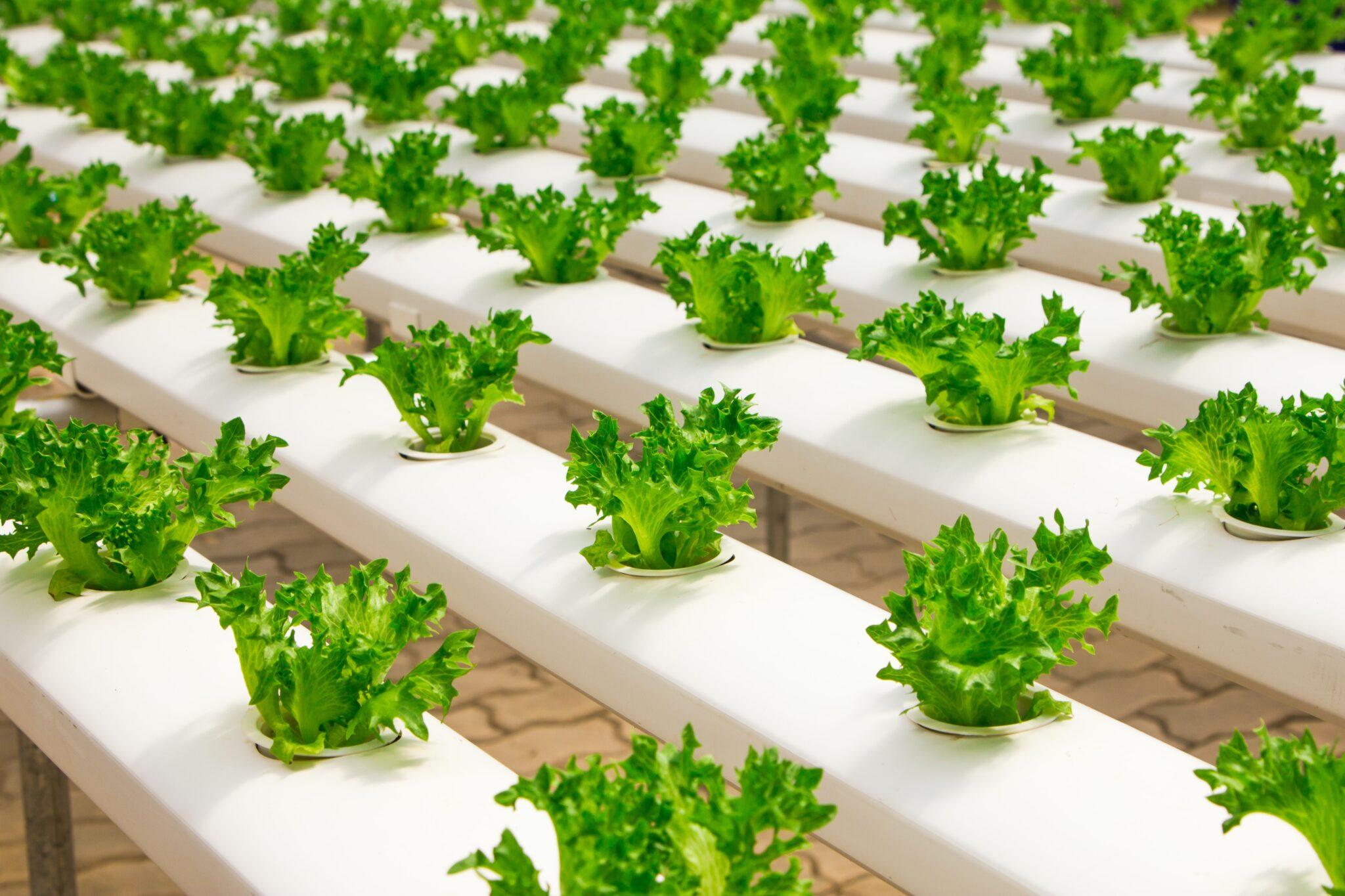
- 06 Apr 2024
Why is it in the News?
In the wake of evolving consumer preferences, India is at the forefront of an agricultural transformation, pivoting towards sustainable farming with an emphasis on health.
What is Hydroponics?
- Hydroponics is a method of growing plants without soil, utilizing nutrient-rich water as the primary source of essential minerals and elements.
- The technique involves the circulation of nutrient-enriched water through a network of pipes or channels, directly supplying the roots of plants with the necessary nourishment for their growth and development.
Key Features and Benefits:
- Soilless Cultivation: Hydroponics eliminates the need for soil by providing an alternative substrate or a soil-like medium, such as rock wool, perlite, or vermiculite, to support the plants' roots.
- Nutrient Control: This technique enables precise control over the nutrient composition, concentration, and pH levels in the water, ensuring optimal nutrient availability for plants.
- Water Efficiency: Hydroponics recirculates and reuses water, significantly reducing water consumption compared to traditional soil-based farming.
- Space Optimization: Due to the compact nature of hydroponic systems, they can be used in urban areas, greenhouses, and indoor facilities, maximizing yield per unit area.
- Year-round Cultivation: With controlled environmental conditions, hydroponics allows for continuous cultivation, regardless of seasonal changes or weather fluctuations.
- Hydroponics provides a sustainable, efficient, and adaptable approach to agriculture, with potential benefits in resource conservation, food security, and sustainable urban food production.
Hydroponics in India:
- According to a report by Datamintelligence, India’s hydroponic market is poised for a remarkable growth trajectory, with a projected Compound Annual Growth Rate (CAGR) of 13.53% by 2027, outpacing the global industry’s estimated growth of 6.8%.
- This surge underscores the vast potential of hydroponics in meeting the rising demand for sustainable food produce, particularly in metros and tier 1 cities where health-conscious consumers are willing to pay a premium for fresh, safe, and sustainably grown products.
- This transformative shift is not just a response to changing consumer preferences for fresh produce but also an adaptation to the geographical and environmental challenges that face traditional farming methods.
Suitable Regions for Hydroponic Farming:
- Hydroponic farming presents a viable solution in regions where traditional farming faces significant barriers:
- Areas with Limited Water Supply: Hydroponics drastically reduces water usage, making it ideal for drought-prone areas.
- Rocky Regions: In places where the terrain is unsuitable for soil-based agriculture, hydroponics offers a practical alternative.
- Low Soil Fertility Areas: Hydroponics bypasses the need for fertile soil, allowing cultivation in regions with poor soil quality.
- Demand-Driven Areas: Regions with a high demand for fresh products are perfect for hydroponic farms, catering to health-conscious consumers in urban and semi-urban locales
The Edge with Hydroponic Farming in India:
- Hydroponic farming’s ascendancy in India is attributed to several compelling benefits, underpinned by technological advancements that lower operational costs and facilitate scalability:
- Versatility in Location: It enables agriculture in environments traditionally deemed unsuitable, such as deserts or cold climates.
- Controlled Conditions: Farmers have precise control over nutrients, pH, and the growing environment, optimizing plant health and yield.
- Resource Efficiency: The recycling of water and nutrients significantly cuts down on input costs and environmental impact.
- Enhanced Growth Rates: Increased oxygen availability accelerates plant growth, leading to quicker harvest cycles.
- Pest and Disease Reduction: By eliminating soil, hydroponics reduces the risk of soil-borne diseases and pests.
- Higher Yields: The efficiency and controlled environment of hydroponic systems result in substantially higher crop yields.
- Labour and Maintenance Savings: The absence of weeding and traditional cultivation reduces labour requirements and costs.
- Improved Working Conditions: Elevating crops to a more accessible height improves ergonomics for farm workers, further reducing labour costs.
- No Need for Crop Rotation: Hydroponics eliminates the necessity for crop rotation, simplifying farm management.
- Reduced Transplant Shock: Plants grown hydroponically experience less stress when transplanted, enhancing survival rates.
Rakhigarhi
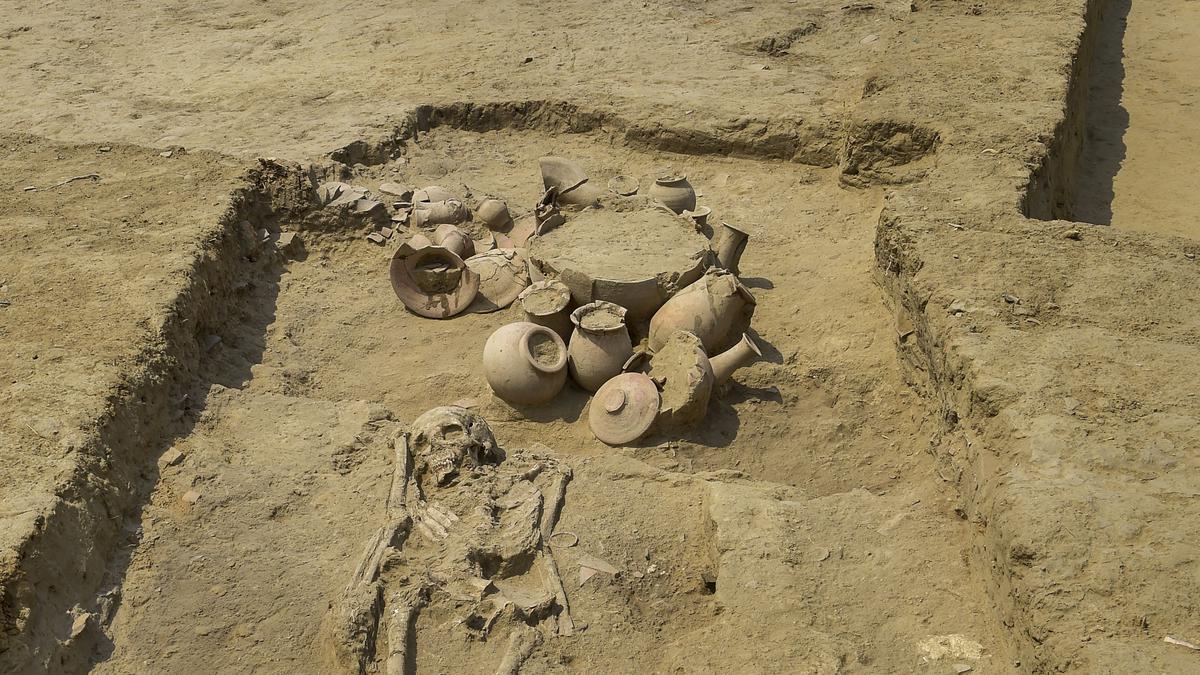
- 06 Apr 2024
Why is it in the News?
The NCERT has proposed updates to school textbooks, including adding findings from DNA analysis of skeletal remains at the Rakhigarhi archaeological site in Haryana and removing references to the Narmada Dam project's impact on tribals, leading to displacement and destitution.
About the Ancient Site of Rakhigarhi:
- The site of Rakhigarhi is one of the five known biggest townships of the Harappan civilization on the Indian subcontinent.
- The other four are:
- Harappa
- Mohenjodaro and Ganveriwala in Pakistan and
- Dholavira (Gujrat) in India
- Five interconnected mounds spread over a huge area from the Rakhigarhi's unique site.
- Two mounds, out of five, were thickly populated.
- This site was excavated by Shri Amarendra Nath of Archeological Survey of India.
- The archaeological excavations revealed a mature Harappan phase represented by a planned township having mud-brick as well as burnt-brick houses with proper drainage systems.
- The ceramic industry is represented by redware, which includes dish-on-stands, vases, jars, bowls, beakers, perforated jars, goblets, and hands.
- Animal sacrificial pits lined with mud brick and triangular and circular fire alters on the mud floor have also been excavated signifying the ritual system of Harappans.
- A cylindrical seal with five Harappan characters on one side and a symbol of an alligator on the other is an important find from this site.
- Other antiquities included blades; terracotta and shell bangles; beads of semiprecious stones, terracotta, shell, and copper objects; animal figurines, toy cart frame and wheel of terracotta; bone points; inscribed steatite seals and sealings.
- The excavations have yielded a few extended burials, which certainly belong to a very late stage, maybe the medieval times.
About Harappan Civilization:
- The Harappan civilization is believed to be one of the oldest world civilizations together with Egypt and Mesopotamia.
- It flourished around 2,500 BC, in the western part of South Asia, in contemporary Pakistan and Western India.
- The Harappan civilization developed along the mighty river, the Indus, and for that reason, it is also known as the Indus Valley Civilization.
- The Harappan civilization is identified as a Bronze-age civilization because many objects have been found that are made up of copper-based alloys.
- For example, the famous ‘dancing girl,’ a bronze figurine that provides an insight into the advances made in art and metallurgy, as well as the hairstyle and ornaments prevalent during the period.
- In the 1920s, the Archaeological Department of India carried out excavations in the Indus Valley wherein the ruins of the two old cities, viz. Mohenjodaro and Harappa were unearthed.
India Abstains from UNHRC Resolution on Gaza Ceasefire
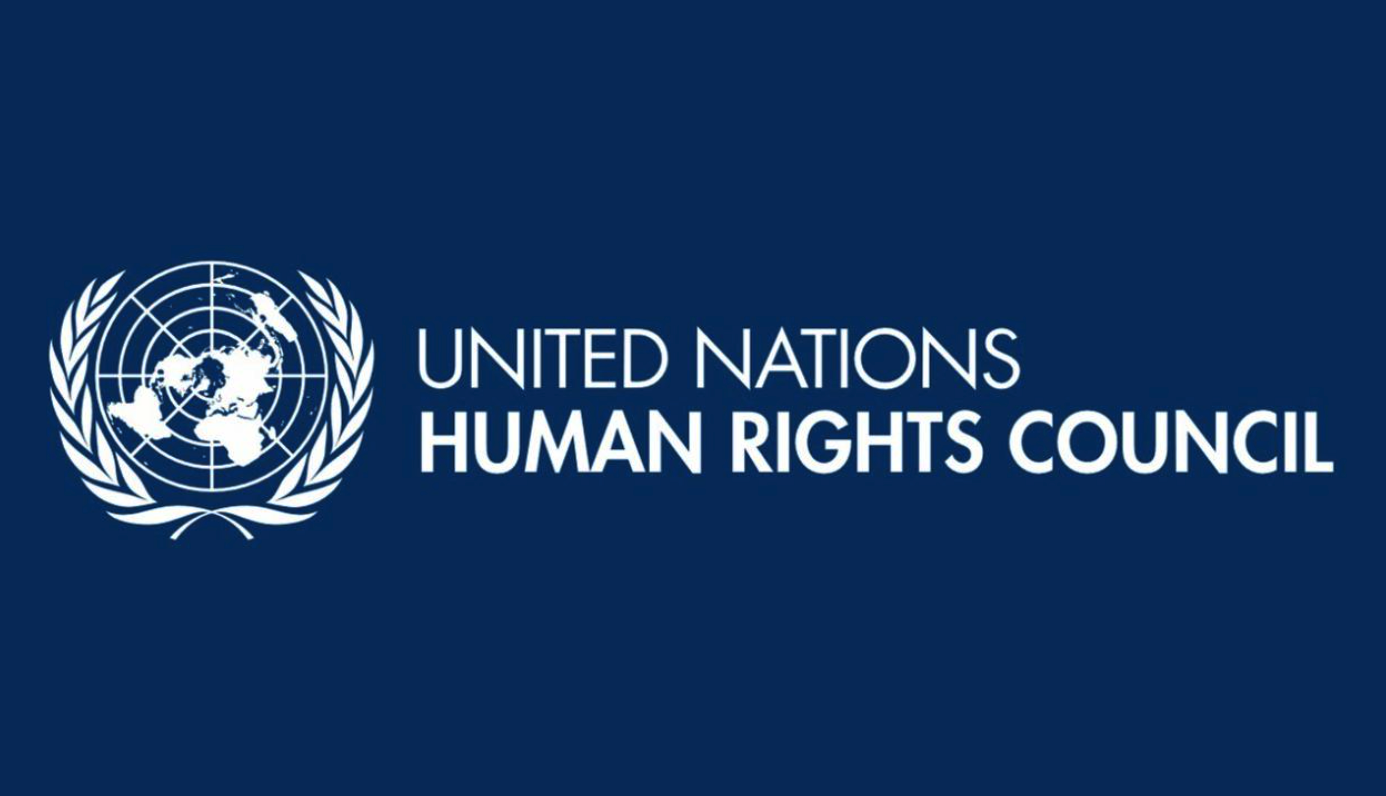
- 06 Apr 2024
Why is it in the News?
India recently abstained on a resolution at the Human Rights Council that called on Israel for an immediate ceasefire in Gaza.
India's Voting Pattern on Israel-Palestine Issues at the UNHRC:
- India's stance on the Israel-Palestine conflict has been reflected in its voting behavior at the United Nations Human Rights Council (UNHRC).
- While India has voted in favor of resolutions criticizing Israel for human rights violations, occupation of the Syrian Golan, and affirming Palestinian self-determination, it has also abstained from certain resolutions.
- In a significant development, India abstained from a resolution calling for an immediate ceasefire in Gaza and an arms embargo on Israel.
- This decision followed instances of violence, including the killing of aid workers and airstrikes.
- India's abstention is believed to be in line with its previous votes on resolutions involving "accountability."
- India's approach indicates its belief that both parties should be held accountable for their actions.
- As a result, it refrains from supporting resolutions that single out one side for condemnation.
- By taking a balanced stance, India aims to promote peace and stability in the region while advocating for the rights of all parties involved.
About the United Nations Human Rights Council (UNHRC):
- The United Nations Human Rights Council (UNHRC) is an inter-governmental body established by the United Nations General Assembly (UNGA) in 2006.
- Headquartered in Geneva, Switzerland, the council serves as a key platform for addressing human rights issues globally.
- The High Commissioner for Human Rights serves as the principal human rights official within the UN system.
- The council convenes three times annually to address human rights violations worldwide.
Membership:
- Comprising 47 member states, the council is responsible for promoting and safeguarding human rights across the globe.
- Member states are elected individually via secret ballot by a majority vote of the General Assembly.
- The election of members occurs within geographical groups to ensure equitable representation.
Tenure:
- Council members serve for a term of three years and are not eligible for immediate re-election after two consecutive terms.
The UNHRC's primary functions include:
- Promoting universal respect for human rights and fundamental freedoms.
- Addressing violations of human rights, including gross and systematic violations.
- Developing international human rights law and making recommendations to the UN General Assembly.
- Conducting investigations into alleged human rights abuses through special rapporteurs and working groups.
- Reviewing the human rights records of all UN member states through the Universal Periodic Review process.
3D Cosmic Map May Open Window To Dark Energy
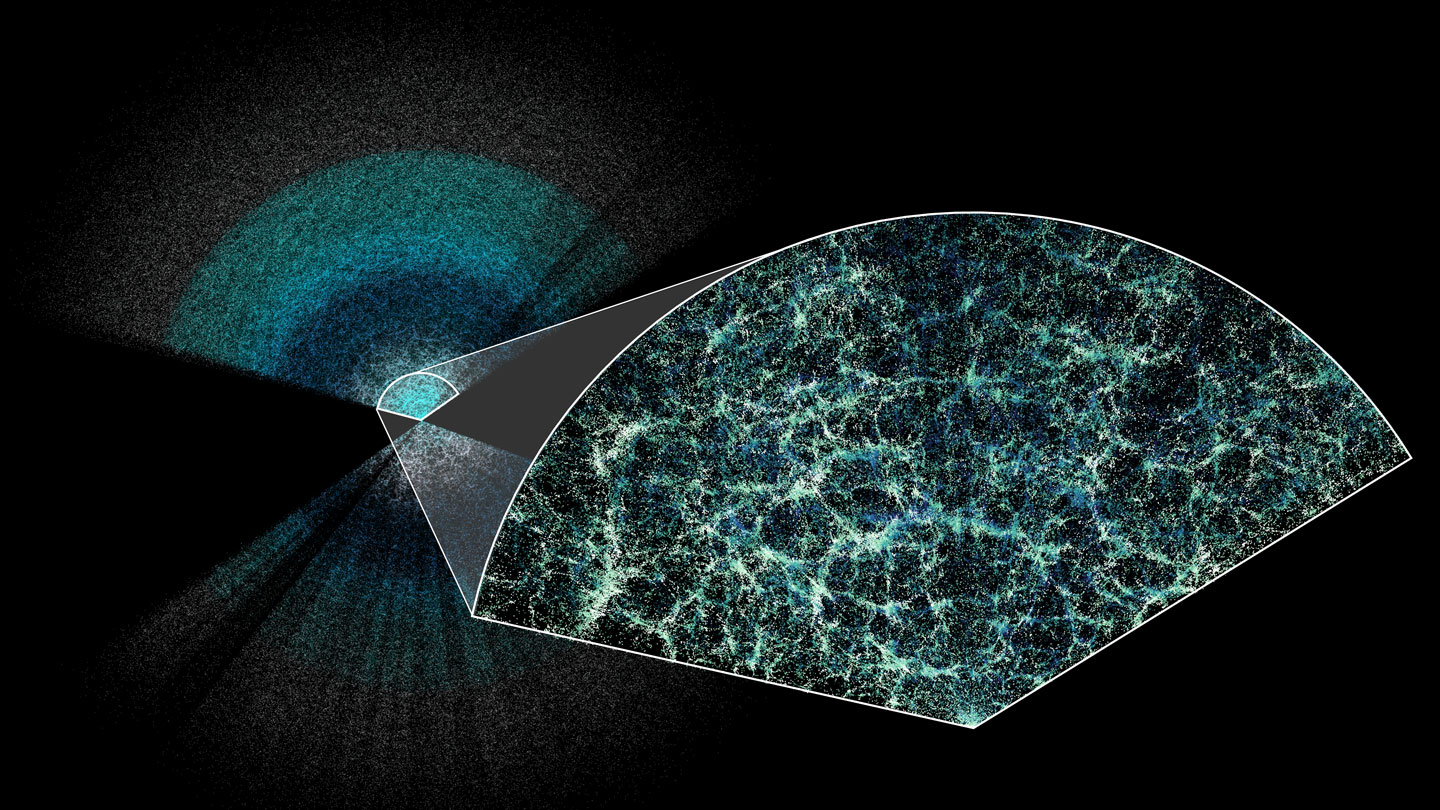
- 05 Apr 2024
Why is it in the News?
An international team of researchers has just released the most comprehensive “three-dimensional” map of the universe, which, scientists hope, could reveal some clues about dark energy, the mysterious force that is believed to be causing the universe to expand uncontrollably.
Context:
- An international team of researchers has unveiled an extensive 3D map of the universe, aiming to unlock secrets about dark energy, the enigmatic force thought to be driving the universe's rapid expansion.
- Led by Shadab Alam from the Tata Institute of Fundamental Research in Mumbai, the team collaborated on this groundbreaking project, utilizing the Dark Energy Spectroscopic Instrument (DESI), a specialized tool capable of simultaneously gathering light from 5,000 galaxies when attached to a telescope.
- The DESI collaboration has measured that the expansion rate of the universe was increasing by 68.5 km per second after every 3.26 million light-years of distance, a unit astronomers define as megaparsec.
About Dark Energy Spectroscopic Instrument (DESI):
- The Dark Energy Spectroscopic Instrument (DESI) is a remarkable tool designed to capture light from an impressive 5,000 galaxies simultaneously when attached to a telescope.
- This collaborative effort involves over 900 researchers from institutions worldwide, with the Tata Institute of Fundamental Research (TIFR) representing India's sole participating institution.
- DESI, stationed atop the Mayall 4-Meter Telescope in Arizona, United States, has enabled researchers to analyze light emissions from an astounding six million galaxies, some dating as far back as 11 billion years ago.
- This wealth of data has facilitated the creation of the most intricate map of the universe to date.
Dark Energy Vs Dark Matter:
- Dark energy and dark matter are two distinct yet mysterious components of the universe, with vastly different properties and effects on cosmic structures.
Nature and Composition:
- Dark Energy: Dark energy is a hypothetical form of energy that permeates all of space and is responsible for the accelerated expansion of the universe.
- It is often associated with a cosmological constant or Einstein's "cosmological antigravity."
- Dark energy is thought to exert a repulsive force that counteracts gravity on cosmic scales, driving galaxies away from each other at an accelerating rate.
- However, its precise nature remains one of the greatest mysteries in modern physics.
- It's important to note that dark energy does not matter; rather, it's an energy density inherent in space itself.
- Dark Matter: Dark matter is a form of matter that does not emit, absorb, or reflect electromagnetic radiation, making it invisible and detectable only through its gravitational effects.
- Unlike dark energy, dark matter exerts an attractive gravitational force, influencing the motion of galaxies and other cosmic structures.
- It interacts with ordinary matter and with itself only through gravity and possibly through weak nuclear force, but not through electromagnetic forces like photons.
- Various astrophysical observations strongly suggest the existence of dark matter, but its precise composition and particle nature are still unknown.
Effects on the Universe:
- Dark Energy: The primary effect of dark energy is to drive the accelerated expansion of the universe.
- This expansion results in the increasing separation between galaxies over time. Dark energy is thought to dominate the energy density of the universe, comprising approximately 68% of the total mass-energy content.
- Dark Matter: Dark matter plays a crucial role in the formation and structure of galaxies and larger cosmic structures.
- Its gravitational influence binds galaxies together and provides the framework for the large-scale cosmic web.
- While dark matter does not emit or interact with light, its presence can be inferred from gravitational lensing, galaxy rotation curves, and the large-scale distribution of matter in the universe.
- Dark matter is estimated to constitute about 27% of the total mass-energy content of the universe.
Detectability:
- Dark Energy: Dark energy is challenging to detect directly because it does not interact with electromagnetic radiation.
- Its existence is inferred from the observational data related to the accelerating expansion of the universe, such as measurements of distant supernovae and the cosmic microwave background radiation.
- Dark Matter: Dark matter is also challenging to detect directly due to its non-interaction with light.
- However, its gravitational effects on visible matter and radiation allow astronomers to indirectly infer its presence.
- Various experimental efforts, such as those involving particle accelerators and underground detectors, aim to detect dark matter particles directly, though success has not yet been achieved.
Agni-Prime Ballistic Missile
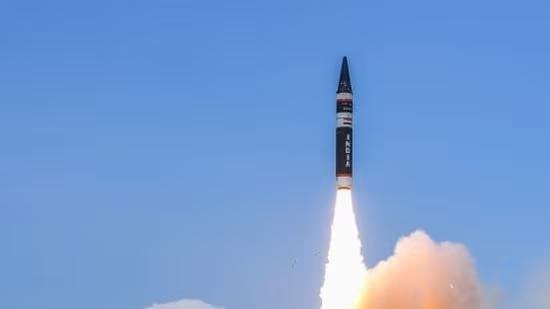
- 05 Apr 2024
Why is it in the News?
India has successfully flight-tested the new generation ballistic missile Agni-Prime from the APJ Abdul Kalam Island off the coast of Odisha.
About Agni-Prime Missile:
- Agni-P or Agni-Prime is a new generation nuclear-capable medium-range ballistic missile (MRBM) developed by the DRDO that incorporates technological advances from Agni-IV and Agni-V and is considered a successor for Agni-I and Agni-II missiles in the operational service of the SFC.
- Agni-Prime, with a strike range of 1,000 to 2,000 km, has significant upgrades, which include composite motor casing, maneuverable reentry vehicle (MaRV), improved propellants, and navigation and guidance systems.
- It is a two-stage, surface-to-surface, road-mobile, and solid-fueled missile that is transported by a truck and launched via a canister.
- It is a ballistic missile with a dual redundant navigation and guidance system.
Features:
- Although Agni-Prime looks similar to Agni-III, the weight is reduced by half.
- Agni-P will replace older generation missiles such as Prithvi-II (350 km), Agni-II (2,000 km), Agni-III (3,000 km), and Agni-4 (4,000 km) ballistic missiles.
- Agni-Prime incorporates upgrades such as propulsion systems, composite rocket motor casings, and advanced navigation and guidance systems.
- Along with Agni-V, Agni-P will provide India with stronger deterrence against countries such as China and Pakistan.
- While Agni-V brings all of China within its strike range, Agni-P seems to have been developed to counter Pakistan's forces.
- Agni-P is developed to achieve maximum maneuverability against missile defense systems and higher accuracy for precision strikes.
What is a Ballistic Missile and why is it named so?
- A Ballistic missile follows a ballistic flight path - which comprises three phases of flight.
- In the first phase or the boost phase, the solid-fuel rocket engine propels the missile upwards and it has to rapidly gain velocity and altitude, by knifing through the densest parts of the earth's atmosphere.
- The second and unpowered phase of flight happens in the upper reaches of the earth's atmosphere or in space, where the missile travels along its pre-determined path, but without the power of its engines.
- It is known as the coast phase or mid-course phase and during this time, it travels along a horizontal path.
- During the coasting, the missile is either in space or the upper atmosphere, where it faces minimal resistance or drag.
- In the third and final phase or the terminal phase, the missile descends and gets back into the earth's atmosphere and flies towards its target, while being guided by its on-board systems.
Sannati: Ancient Buddhist Site
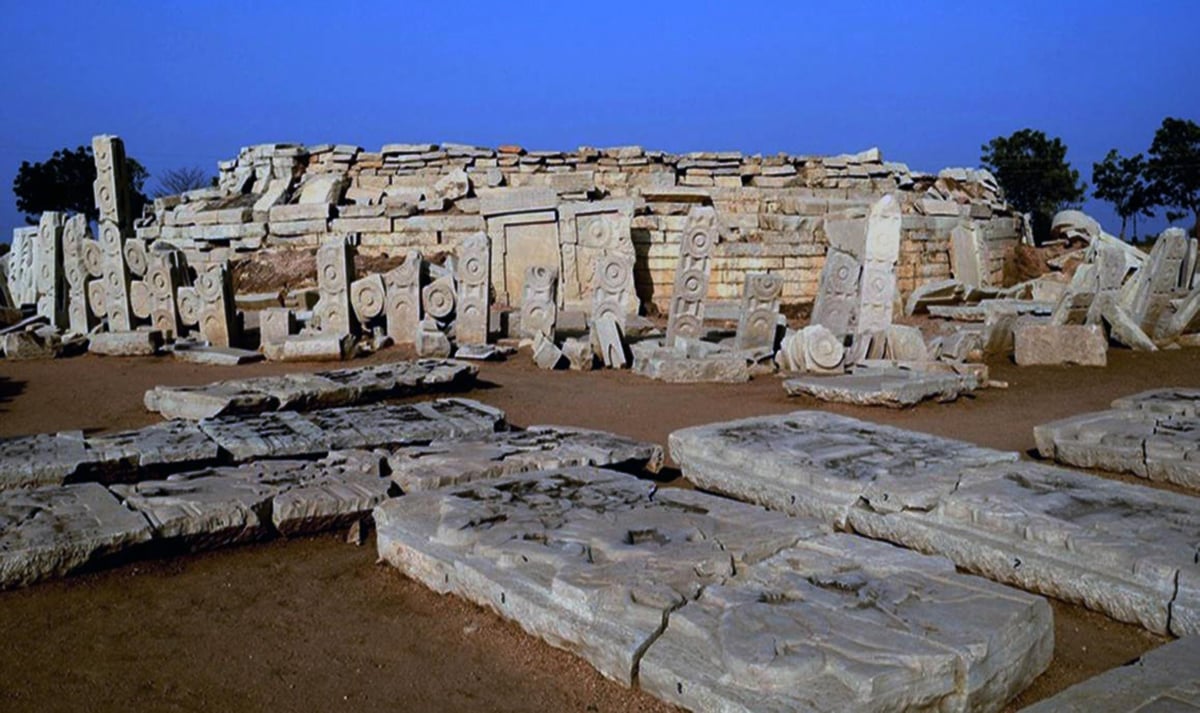
- 05 Apr 2024
Why is it in the News?
Left neglected for many years after it came to light through the ASI excavations in the 1990s, the ancient Buddhist site of Sannati on the bank of the Bhima River got a restoration project in 2022.
About Ancient Sannati Buddhist site:
- This ancient Sannati Buddhist site, situated alongside the Bhima River near Kanaganahalli in Karnataka's Kalaburagi district, offers a rich historical and cultural experience.
- Notably, it also boasts the Chandrala Parameshwari Temple, a popular attraction among tourists.
Key discoveries at this site include evidence of development across three distinct phases:
- Maurya, Early Satavahana, and Later Satavahana periods, span from the 3rd Century B.C. to the 3rd Century A.D.
- The Ranamandala area of Sannati presents a unique chronological timeline from prehistoric to early historic eras.
- Among the remarkable findings is an inscription in the Prakrit language, inscribed using Brahmi script.
- Noteworthy is the recovery of a significant stone sculpture portraying Mauryan Emperor Ashoka, surrounded by his queens and attendants, with the inscription "Raya Asoko" in Brahmi script, leaving no doubt about the identity of the depicted figure.
- The excavation also yielded around 60 dome slabs featuring sculptural depictions of Jataka stories, significant events in the life of Buddha, portraits of Shatavahana monarchs, and unique representations of Buddhist missionaries dispatched by Ashoka to various regions.
- Moreover, the ancient Nagavi Ghatikasthana, often dubbed as the Takshashila of the South, lies approximately 40 km from Sannati.
- Functioning as a prominent educational center akin to a modern-day university during the Rashtrakuta and Kalyana Chalukya dynasties from the 10th to 12th Centuries, it held great historical significance.
Microplastics
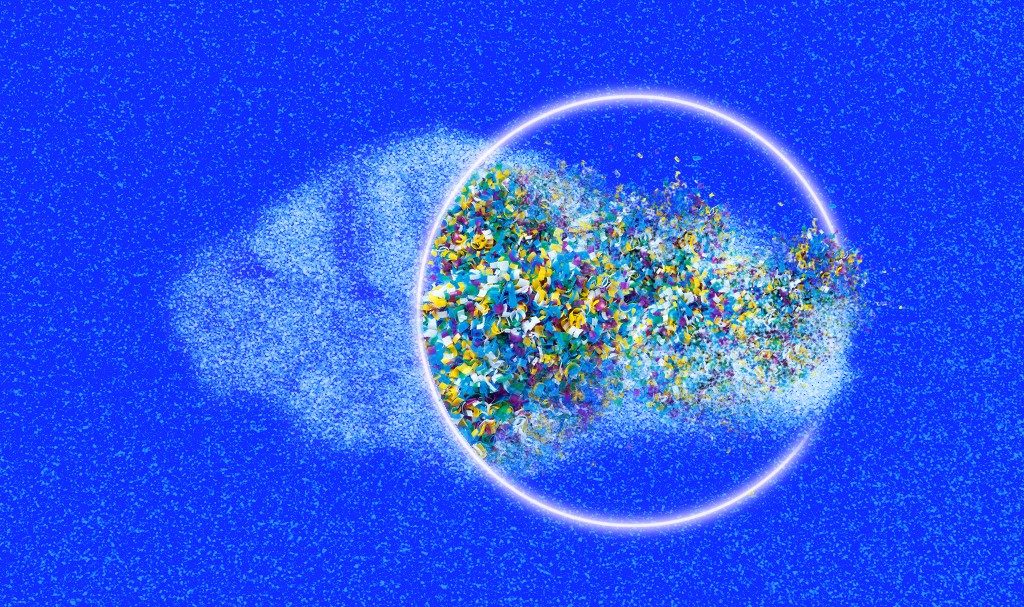
- 05 Apr 2024
Why is it in the News?
Recently, scientists have created plant-based plastic that doesn't create cancer-causing microplastics because 97% of it breaks down in the environment.
What is Microplastics?
- Microplastics are small plastic particles measuring less than 5 millimeters in diameter.
- These particles, which are distinguished from larger "macroplastics" like bottles and bags, stem from both commercial product development and the breakdown of larger plastics.
- Microplastics are commonly found in a variety of products, including cosmetics, synthetic clothing, plastic bags, and bottles.
- Unfortunately, many of these products can easily enter the environment as waste.
- Composed of carbon and hydrogen atoms linked in polymer chains, microplastics often contain additional chemicals such as phthalates, polybrominated diphenyl ethers (PBDEs), and tetrabromobisphenol A (TBBPA).
- There are two categories of microplastics: primary and secondary.
- Primary microplastics are intentionally designed for commercial use, including in cosmetics and microfibers shed from textiles like clothing and fishing nets.
- Secondary microplastics, on the other hand, result from larger plastic items breaking down due to environmental factors such as sunlight and ocean waves.
- Understanding the sources and types of microplastics is crucial for addressing their impact on the environment, wildlife, and human health, ultimately promoting more sustainable production and waste management practices.
Environmental Impacts of Microplastics:
- Microplastics pose significant environmental concerns due to their resistance to breaking down into harmless compounds, much like larger plastic items.
- Consequently, both primary and secondary microplastics accumulate and endure once introduced into the environment.
- In marine ecosystems, microplastics have the potential to amalgamate with harmful chemicals before being consumed by marine organisms.
- Despite efforts, conventional water treatment facilities struggle to completely eliminate microplastics from water sources.
- Additionally, microplastics contribute to air pollution as they are present in dust and airborne fibrous particles, further highlighting their pervasive impact on various environmental systems.
Project Akashteer
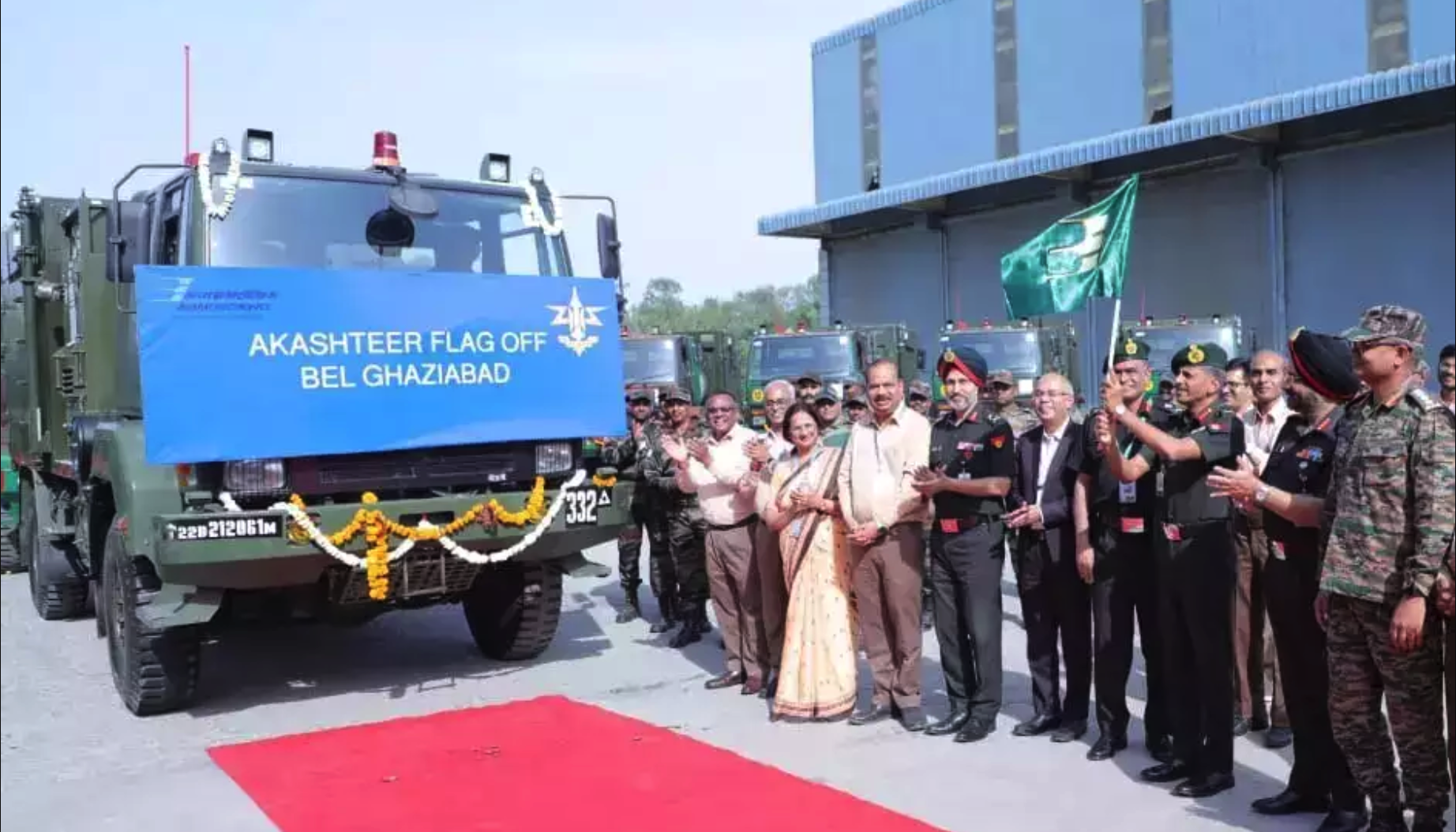
- 05 Apr 2024
Why is it in the News?
The Army has started the induction of control and reporting systems under ‘Project Akashdeer’ to bolster its air defense capabilities.
What is 'Project Akashteer'?
- 'Project Akashteer' is a cutting-edge initiative designed to automate air defense control and reporting processes by digitizing them.
- Developed by Bharat Electronics Limited (BEL) as part of the 'Atmanirbhar Bharat' initiative, this project is poised to significantly enhance the operational efficiency and integration of the Army's air defense mechanisms.
- By integrating radar and communication systems at all levels into a unified network, 'Akashteer' aims to deliver an unprecedented level of situational awareness and control.
- This will enable swift engagement of hostile targets, significantly reduce the risk of fratricide, and ensure the safety of friendly aircraft in contested airspace.
- A noteworthy aspect of 'Akashteer' is its emphasis on mobility and resilience.
- The system's control centers, designed to be vehicle-based and mobile, can maintain operational capabilities even in challenging communication environments.
- The system will facilitate the achievement of complete automation of air defense operations and significantly enhance the air defense posture of India.
- The induction of the systems has commenced in the Indian Army's Corps of Army Air Defense, marking a significant move towards enhancing India's defense capabilities and technology absorption.
How it will help India's air defense system?
- The 'Akashteer Command and Control Systems will significantly enhance India's air defense capabilities in several ways:
- Efficiency and Integration: By digitizing Air Defence Control and Reporting processes, 'Akashteer' will usher in unprecedented levels of efficiency and integration.
- This will enable the Indian Army to respond swiftly to hostile threats while minimizing the risk of friendly fire incidents.
- Situational Awareness: 'Akashteer' integrates radar and communication systems into a unified network, providing the Indian Army with unprecedented situational awareness.
- This will enable them to detect and engage hostile targets more effectively, ensuring the safety of friendly aircraft in contested airspace.
- Mobility and Resilience: The system's vehicle-based and mobile Control Centers are designed to maintain operational capabilities even in challenging communication environments.
- This ensures that the Indian Army can operate effectively in diverse terrain and under adverse conditions.
- Automation: Overall, the deployment of 'Akashteer' signifies a leap towards complete automation of air defense operations.
- This will enhance the Indian Army's ability to defend its airspace, ensuring a safer and more secure future for the country.
- The Indian Army has declared 2024 as the 'Year of Technology Absorption' and is undertaking various initiatives to induct niche technology and systems into its inventory.
- The induction of 'Akashteer' control centers is one of the major milestones achieved by the Army on its path to transformation to meet the current and futuristic requirements of complex air defense operations.
Ring of Fire
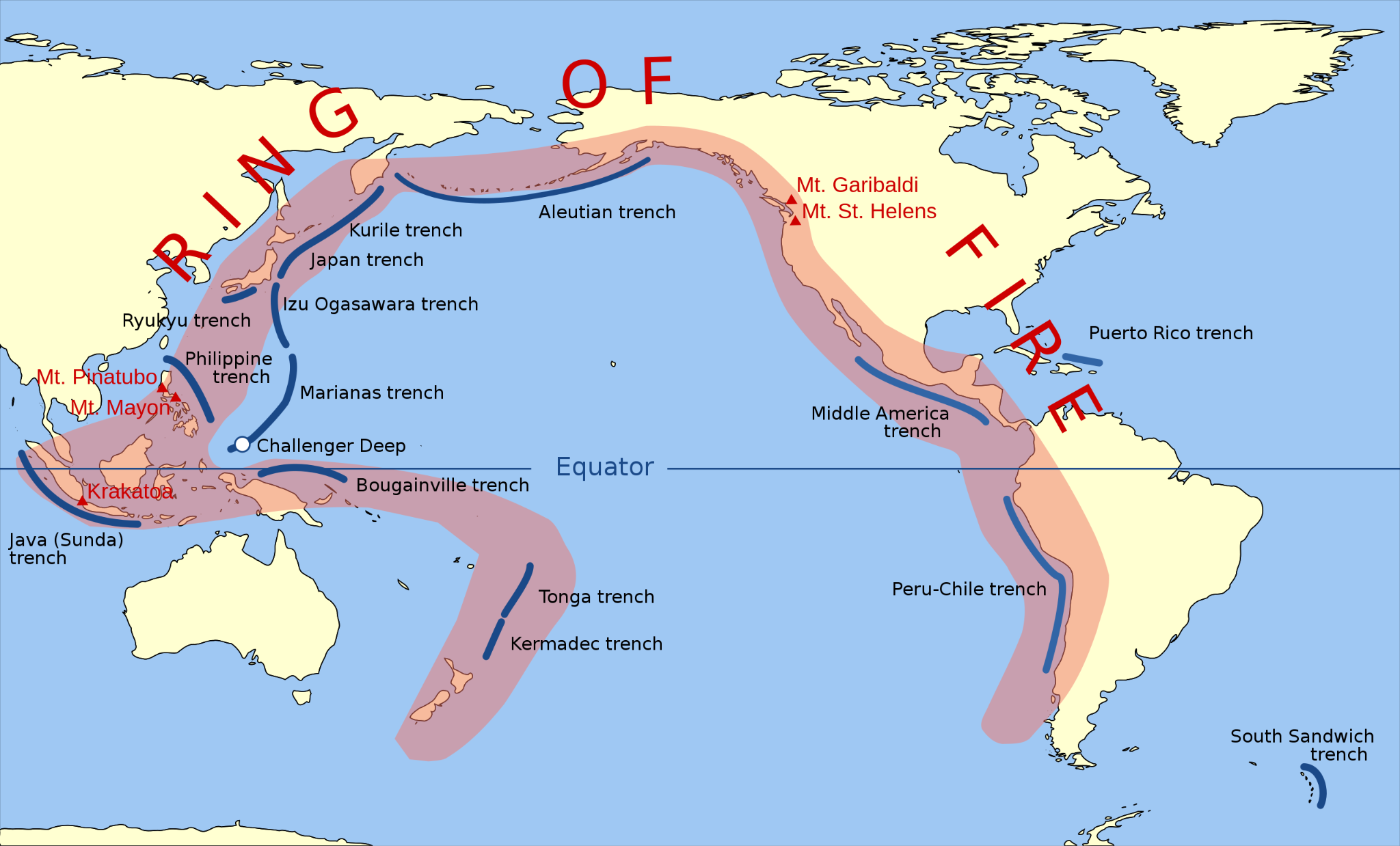
- 04 Apr 2024
Why is it in the News?
Nine people died and more than 1,000 were injured in Taiwan after the island was hit by its biggest earthquake in at least 25 years on Wednesday (April 4) morning.
What is the Ring of Fire?
- The Ring of Fire is essentially a string of hundreds of volcanoes and earthquake sites that run along the Pacific Ocean.
- It is a semicircle or horseshoe in shape and stretches nearly 40,250 kilometers.
- The Ring of Fire traces the meeting points of numerous tectonic plates, including the Eurasian, North American, Juan de Fuca, Cocos, Caribbean, Nazca, Antarctic, Indian, Australian, Philippine, and other smaller plates, which all encircle the large Pacific Plate, according to a report by National Geographic.
- It runs through 15 more countries including the USA, Indonesia, Mexico, Japan, Canada, Guatemala, Russia, Chile, Peru, and the Philippines.
Why is the Ring of Fire Vulnerable to Earthquakes?
- The Ring of Fire witnesses so many earthquakes due to constant sliding past, colliding into or moving above or below each other of the tectonic plates.
- As the edges of these plates are quite rough, they get stuck with one another while the rest of the plate keeps moving.
- An earthquake occurs when the plate has moved far enough and the edges unstick on one of the faults.
Why are There so Many Volcanoes in the Ring of Fire?
- The existence of volcanoes in the Ring of Fire is also due to the movement of tectonic plates.
- Many of the volcanoes have been formed through a process known as subduction.
- It takes place when two plates collide with each other and the heavier plate is shoved under each other, creating a deep trench.
- “When a ‘downgoing’ oceanic plate [like the Pacific Plate] is shoved into a hotter mantle plate, it heats, volatile elements mix, and this produces the magma.
- The magma then rises through the overlying plate and spurts out at the surface,” which leads to the formation of volcanoes, according to a report by DW.
- Most of the subduction zones on the planet are located in the Ring of Fire and that’s why it hosts a large number of volcanoes.
Why is Taiwan so Exposed to Earthquakes?
- Taiwan lies along the Pacific “Ring of Fire,” the line of seismic faults encircling the Pacific Ocean where most of the world’s earthquakes occur.
- The area is particularly vulnerable to temblors due to the tension accumulated from the interactions of two tectonic plates, the Philippine Sea Plate and the Eurasian Plate, which may lead to sudden releases in the form of earthquakes.
- The region’s mountainous landscape can magnify the ground shaking, leading to landslides.
myCGHS App
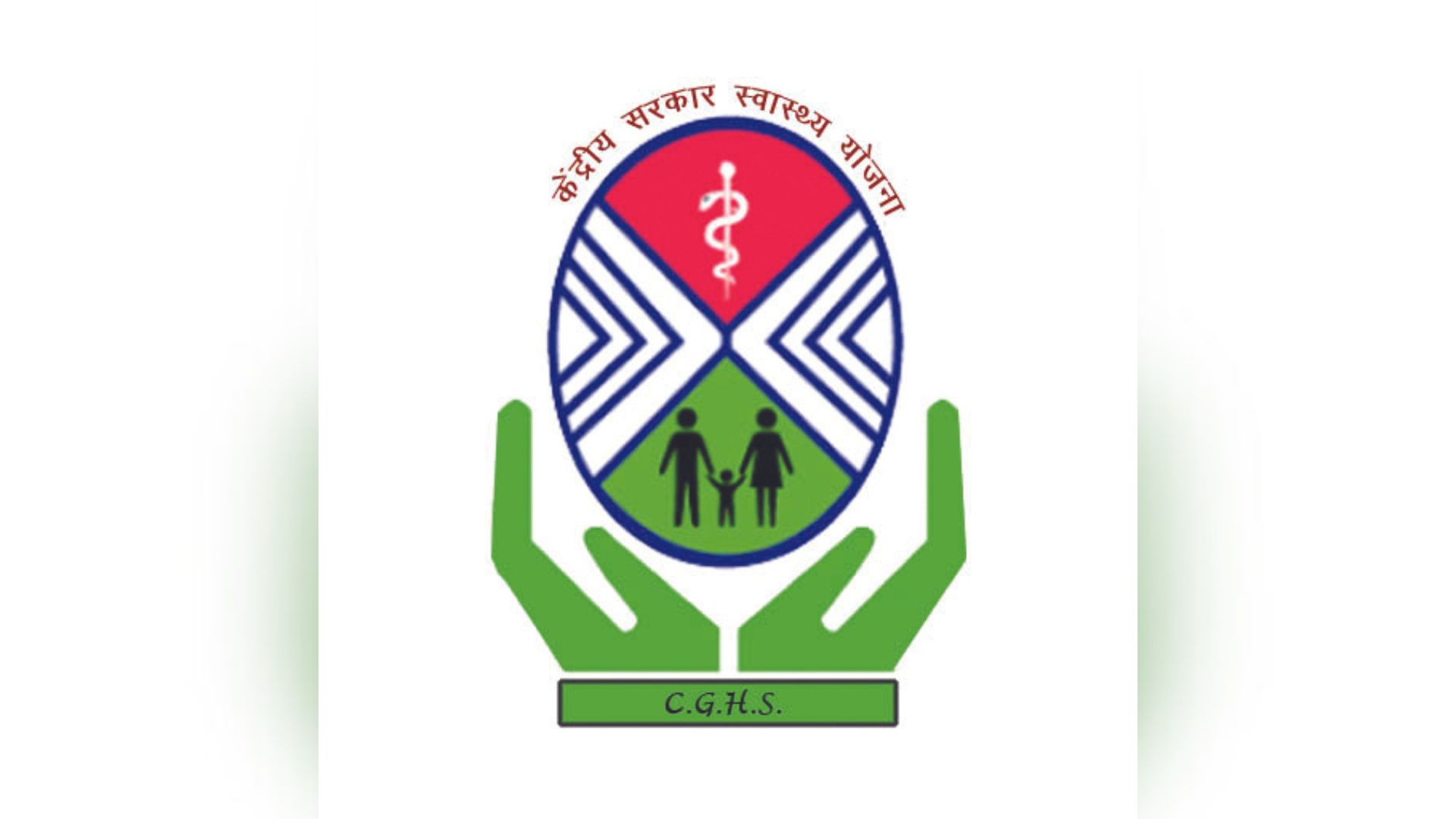
- 04 Apr 2024
Why is it in the News?
Recently, the government has launched the 'myCGHS' app for iOS to provide Central Government Health Scheme beneficiaries access to electronic health records, information, and resources.
About myCGHS app:
- The Union Health Ministry launched the myCGHS app for iOS (Apple Users) to provide easy access for the Central Government Health Scheme (CGHS) beneficiaries to their Electronic Health Records, information, and other resources.
- The myCGHS iOS app is developed by the technical teams of the National Informatics Centre (NIC) Himachal Pradesh and the NIC Health Team.
- It is a convenient mobile application offering features aimed at enhancing information and accessibility for CGHS beneficiaries.
- The app is said to offer a range of services including:
- Online appointment booking and cancellation
- Downloading CGHS card and index card
- Accessing lab reports from CGHS labs
- Checking medicine history
- Monitoring medical reimbursement claim status
- Accessing referral details
- Locating nearby wellness centers
- Staying updated with news and highlights, and
- Finding nearby impaneled hospitals, labs, and dental units.
- Additionally, users can access the contact details of wellness centers and offices conveniently.
- To ensure data security, the app also features security measures such as two-factor authentication and mPIN function to be able to access the app once they are logged in.
- Users on the Apple ecosystem can find the app on the App Store and download it free of charge.
- The myCGHS app has been available for Android users since February 2022.
Key Highlights of the Central Government Health Scheme (CGHS):
- CGHS provides healthcare services to registered employees and pensioners of the Central Government of India.
- Enrolled members receive reimbursement and cashless healthcare facilities through this scheme.
- It encompasses healthcare services from various systems of medicine including Allopathy, Homeopathy, Ayurveda, and Unani.
- CGHS beneficiaries have the flexibility to undergo treatment at any impaneled private hospital of their preference.
Ahobilam Temple
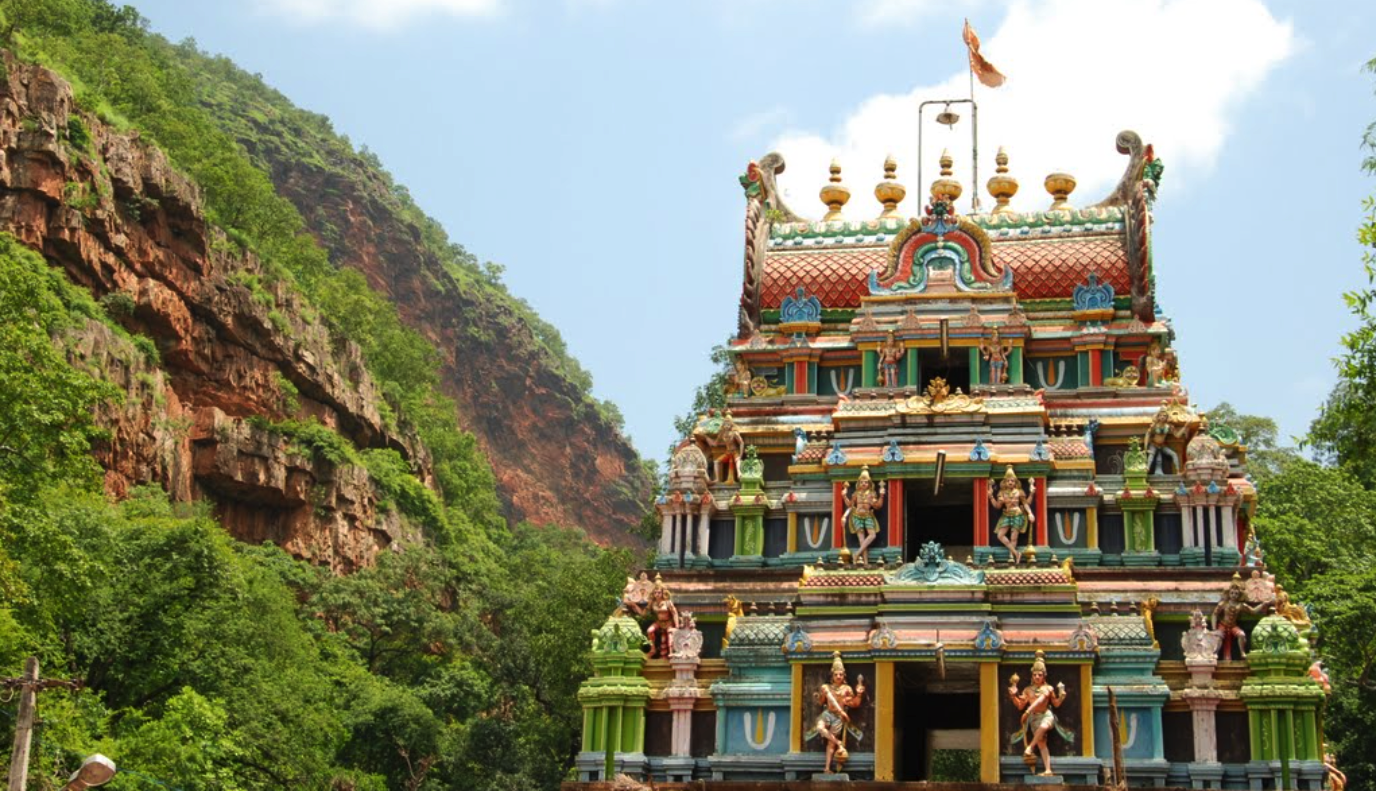
- 04 Apr 2024
Why is it in the News?
The Forest Department and Sri Lakshmi Narasimha Swamy Devasthanam (SLNSD) at Ahobilam have imposed certain restrictions on visitors arriving at the shrine, which is composed of nine different temples, situated within the Nallamala forest.
About Ahobilam Temple:
- The Ahobilam is a famous temple situated on the Nallamalai ranges in the state of Andhra Pradesh.
- The Nallamalai ranges south of river Krishna, down to Tirupati, and are called `Sesha Parvatha`.
- Sesha is the name of the king of serpents.
- The hood of the sesha is at Tirupati, the tail is at Srisailam, and the middle is situated at Ahobilam.
- Nallamalais at the tail are called Sringiri
- In the middle are called Vedagiri and
- Garudagiri referred to as the hood
- The shrine of the Ahobilam temple is situated on the top of the first range and is referred to as Upper Ahobilam and down below is called Lower Ahobilam.
- A huge temple surrounded by several buildings can be seen at the Upper Ahobilam.
- The main shrine or the "sacro sanctum" at Upper Ahobilam was carved out of a big egg-like rock with mandapams.
- There is a tank here, which supplies water to the residents of the Upper Ahobliam temple.
- There is a Lower Ahobilam in the below with a big temple and enclosures, It was built according to the South Indian style (Dravidian architecture).
Significance:
- Ahobilam is traditionally regarded as the place where Vishnu in the form of Narasimha killed the Rakshasa Hiranyakashipu to save his devotee Prahlada.
- The legend says that Narasimha emerged from a rock pillar to slay the Rakshasa.
- The moment is represented in several murtis in the various temples.
- Also, Garuda prayed for a vision of Narasimha in the form of Avathara, to fulfill his wish, and settled in nine forms across the hills in Ahobilam.
About Nallamala Forest:
- Nallamala Forest is among South India's largest expanses of untouched woodland, besides the Western Ghats.
Location:
- Situated across five districts in Andhra Pradesh and Telangana, it sprawls across the Nallamala Hills, a segment of the Eastern Ghats, south of the Krishna River.
- Part of the forest falls within the Nagarjunsagar-Srisailam Tiger Reserve, the nation's largest tiger reserve, boasting a significant tiger population.
Climate:
- Experiencing warm to hot conditions year-round, with scorching summers and mostly cool, dry winters.
- The majority of rainfall occurs during the southwest monsoon.
Vegetation:
- Tropical dry deciduous.
Flora:
- Nallamala Forest is rich in endemic species like Andrographis nallamalayana, Eriolaena lushingtonii, Crotalaria madurensis var, Dicliptera beddomei, and premna hamitonii.
Fauna:
- Home to over 700 animal species, including tigers, leopards, black bucks, wild hogs, peacocks, pangolins, Indian Pythons, King Cobras, and numerous rare bird species.
Glacial Lake Outburst Floods
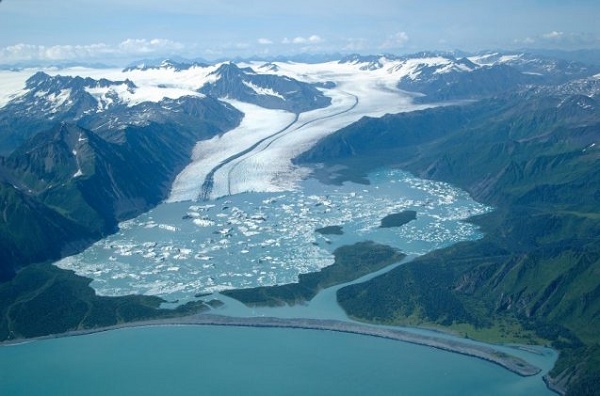
- 04 Apr 2024
Why is it in the News?
Recently, the Uttarakhand government has constituted two teams of experts to evaluate the risk posed by five potentially hazardous glacial lakes in the region.
What is Glacial Lake Outburst Flood (GLOF)?
- A GLOF denotes the sudden release of meltwater from a moraine or ice-dammed glacial lake, typically due to dam failure.
- These events pose significant hazards, often resulting in catastrophic flooding downstream, leading to substantial loss of life and property.
- GLOF can be triggered by several factors, including earthquakes, heavy rains, and avalanches.
Key Features of GLOFs:
-
- Sudden water releases.
- Rapid occurrences lasting hours to days.
- Large downstream river discharges.
Threats Posed by GLOFs in the Himalayan Regions:
- Climate Change Impact: Climate change-induced glacier melt accelerates the formation or expansion of glacial lakes, heightening the risk of GLOFs.
- Vulnerability of Moraines and Dams: Glacial lakes situated behind unstable moraines or natural dams are prone to breaching, as evidenced by events like the Kedarnath floods in 2013.
- Immediate Flood Risks: Abrupt water releases trigger massive floods, causing extensive damage to homes, and infrastructure, and triggering landslides and sedimentation.
Mitigation Strategies for GLOFs:
- Risk Assessment and Zonation: Identify high-risk areas and implement necessary mitigation measures, including mapping and modeling, as outlined in the 'Guidelines for Preparation of Disaster Management Plans for Glacial Lake Outburst Floods (GLOF)'.
- Early Warning Systems: Establish monitoring networks with sensors to detect changes in glacial lakes and provide timely warnings to vulnerable communities.
- Utilization of Technology: Leverage remote sensing and GIS-based tools for monitoring glacial lakes and surrounding areas.
- Regulation of Construction: Implement construction codes to regulate development in high-risk zones, exemplified by the 'Guidelines for the Construction of Earthquake Resistant Buildings' developed by the NDMA.
- Capacity Building Initiatives: Enhance skills and resources through training programs conducted by institutions like the National Centre for Disaster Management, in collaboration with the private sector and NGOs.
- Infrastructure Development: Invest in infrastructure to redirect potential floodwaters away from communities and critical infrastructure.
The Marine Products Export Development Authority (MPEDA)
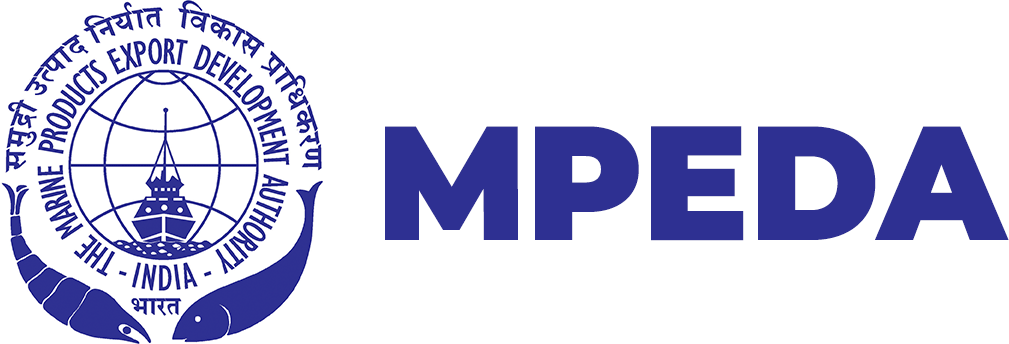
- 04 Apr 2024
Why is it in the News?
Officials recently emphasized that India's shrimp export value chain is certified by the Marine Products Export Development Authority (MPEDA), ensuring that abusive conditions are not tolerated at shrimp farms.
About the Marine Products Export Development Authority (MPEDA):
- The Marine Products Export Development Authority (MPEDA) was set up by an act of Parliament in 1972.
- The erstwhile Marine Products Export Promotion Council established by the Government of India in September 1961 was converged into MPEDA on 24th August 1972.
- MPEDA is given the mandate to promote the marine products industry with special reference to exports from the country.
- It is the nodal agency for the holistic development of the seafood industry in India to realize its full export potential as a nodal agency.
- Based on the recommendations of MPEDA, the Government of India notified new standards for fishing vessels, storage premises, processing plants, and conveyances.
- MPEDA’s focus is mainly on Market Promotion, Capture Fisheries, Culture Fisheries, Processing Infrastructure & Value addition, Quality Control, Research and Development.
- It is envisaged that this organization would take all actions to develop and augment the resources required for promoting the exports of “all varieties of fishery products known commercially as shrimp, prawn, lobster, crab, fish, shellfish, other aquatic animals or plants or part thereof and any other products which the authority may, by notification in the Gazette of India, declare to be marine products for (the) Act”.
- The Act empowers MPEDA to regulate exports of marine products and take all measures required for ensuring sustained, quality seafood exports from the country.
- MPEDA is given the authority to prescribe for itself any matters that the future might require for protecting and augmenting the seafood exports from the country.
- It is also empowered to inspect marine products, their raw materials, fixing standards, specifications, and training as well as take all necessary steps for marketing the seafood overseas.
Major Functions of MPEDA:
-
- Infrastructure registration for seafood export trade.
- Trade information collection and dissemination.
- Promotion of Indian marine products overseas.
- Assistance for infrastructure development and modernized processing.
- Aquaculture promotion for export production augmentation.
- Deep-sea fishing project promotion and equipment upgrade.
- Market promotion and publicity activities.
- Inspection of marine products and raw materials, setting standards.
- Training for fishermen, fish processing workers, and aquaculture farmers.
- Research and development through RGCA.
- Extension activities through NETFISH and NaCSA.
- Matters related to protecting and increasing seafood exports.
- Headquarters of MPEDA is located in Kochi, Kerala.
- Nodal Ministry: Ministry of Commerce and Industry.
- It has Trade Promotion offices in New Delhi, Tokyo, and New York.
South Korea’s ‘Artificial Sun’ KSTAR Reaches 100 Million Degrees Celsius

- 03 Apr 2024
Why is it in the News?
South Korean scientists have set a new world record for the length of time they sustained temperatures of 100 million degrees Celsius.
Key Highlights:
- The Korea Superconducting Tokamak Advanced Research (KSTAR) fusion reactor reached temperatures of 100 million Celsius for 48 seconds.
- Scientists hope to harness this unlimited energy.
- It is also significant that the KSTAR maintained the high confinement mode (H-mode) for over 100 seconds.
- H-mode is a stable plasma state.
- The earlier record of achieving this temperature was for 30 seconds which took place in 2021.
- The scientists at the Korea Institute of Fusion Energy (KFE) said they managed to extend the time by tweaking the process.
- They also used tungsten instead of carbon in the 'diverters', which extract heat and impurities produced by the fusion reaction.
- The International Thermonuclear Experimental Reactor in southern France has the world's biggest tokamak and what the scientists in South Korea achieve will help French scientists.
What is an Artificial Sun?
- An artificial sun typically refers to a device or facility designed to replicate some aspects of the nuclear fusion processes that occur naturally in stars like the Sun.
- These facilities aim to generate and sustain controlled nuclear fusion reactions, usually through the use of high temperatures, pressures, and magnetic fields.
- Scientists generally use a donut-shaped reactor called a tokamak in which hydrogen variants are heated to extraordinarily high temperatures to create a plasma.
- High temperatures and high-density plasmas are vital for the future of nuclear fusion reactors.
- This is called artificial Sun because it replicates the reaction of fusion taking place there and unleashes a massive amount of heat energy.
- The goal is to harness fusion energy as a potential future source of clean and abundant energy for various applications, including electricity generation.
What is Nuclear Fusion?
- Fusion is the reaction that makes the sun and other stars shine.
- It involves fusing hydrogen and other light elements to release massive power that experts in the field hope to harness for unlimited, zero-carbon electricity.
- In this reaction, two atoms of hydrogen or helium come together and fuse to unleash huge amounts of energy.
Wadge Bank
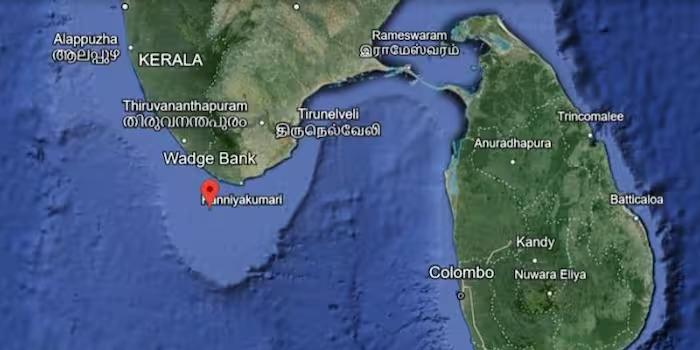
- 03 Apr 2024
Why is it in the News?
While India 'gave away' rights to Katchatheevu, in a subsequent pact, it secured sovereign rights in Wadge Bank near Kanyakumari.
What is Wadge Bank?
- Wadge Bank is a 10,000 square kilometer submarine plateau, of the sea south of Kanyakumari that is rich in biodiversity and considered India’s richest fishery resource.
- Wadge Bank, located near Cape Comorin, is home to more than 60 species of ornamental fish and other oceanic animals.
- It is a productive coastal area where three seas meet and tides create a rich fishing ground from May to October.
- Moreover, it is an invaluable treasure that indigenous people and communities depend on for food and resources, and is important to their culture.
How did India get control of the Wadge Bank?
- Wadge Bank came to India as part of the second of the two accords signed with Sri Lanka in the 1970s.
- Following the 1974 agreement under which Prime Minister Indira Gandhi ‘gave away’ Katchatheevu island to Sri Lanka, New Delhi, and Colombo signed another pact in 1976 under which the former bought Wadge Bank.
- On March 23, 1976, India and Sri Lanka signed the agreement on the maritime boundary in the Gulf of Mannar and the Bay of Bengal as part of which it was agreed that the Wadge Bank “lies within the exclusive economic zone of India, and India shall have sovereign rights over the area and its resources”.
- In the general description of Wadge Bank annexed with the treaty shared with the United Nations, it is described as “outside the territorial waters of India”.
- The Wadge Bank near Kanyakumari is rich in biodiversity and considered India’s richest fishery resource.
- As per the 1976 pact, Sri Lankan fishermen can’t engage in activities here.
- ??But at the request of Sri Lanka and as a gesture of goodwill, India agreed that Lankan fishing vessels licensed by the Government of India could fish in Wadge Bank for three years from its establishment as an exclusive economic zone of India with the stipulation that only six such vessels can fish and their catch cannot exceed 2,000 tonnes in a year.
- And, again at the request of the Sri Lankan government, India agreed to provide Colombo with 2,000 tonnes of fish of the quality, species, and at the price mutually agreed by the two sides for five years after the Lankans stopped fishing at the Wadge Bank.
BIMSTEC Charter
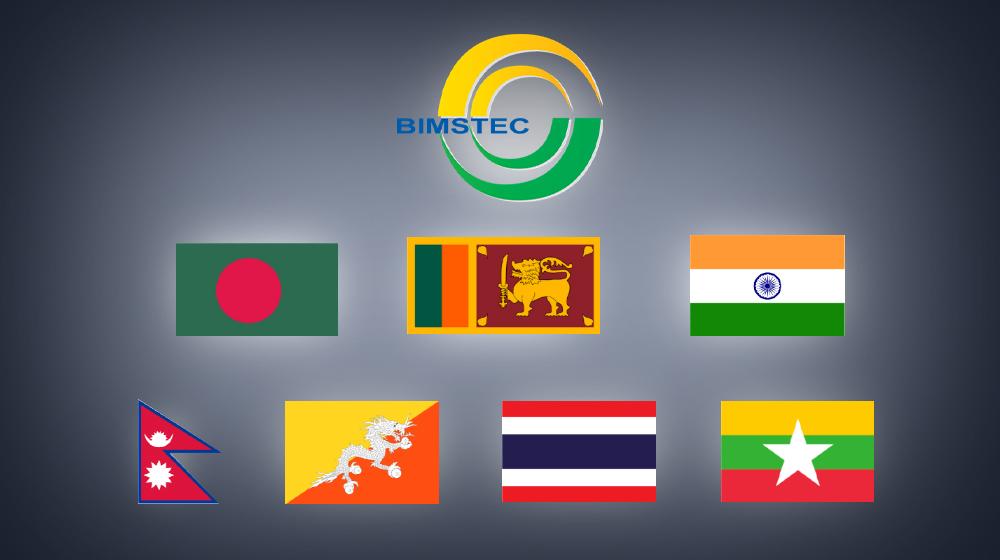
- 03 Apr 2024
Why is it in the News?
Recently, a significant majority in Nepal's Lower House backed the proposal to endorse the BIMSTEC Charter.
About the BIMSTEC Charter:
- The BIMSTEC Charter, officially signed and adopted during the Fifth BIMSTEC Summit in Colombo, Sri Lanka in 2022, serves as a cornerstone legal and institutional framework for the Bay of Bengal Initiative for Multi-Sectoral Technical and Economic Cooperation (BIMSTEC).
- This charter aims to establish a structured environment conducive to rapid economic development by delineating specific cooperation projects within the agreed areas of collaboration, along with potential expansions into additional areas as mutually agreed upon by Member States.
- Furthermore, the charter reaffirms the enduring commitment to the foundational principles and objectives of BIMSTEC, as articulated in the Bangkok Declaration of 1997.
The Importance of the BIMSTEC Charter:
- By officially adopting the BIMSTEC Charter, the organization transforms into a structured institution comprising member states situated along the Bay of Bengal, thereby formalizing their cooperation and dependence on this vital maritime region.
- The Charter grants BIMSTEC the authority to establish external relations with non-member states, developmental partners, as well as regional, UN, and international organizations, facilitating broader collaboration and engagement.
- Moreover, it underscores the imperative for a fair, just, equitable, and transparent global order while reiterating the commitment to multilateralism, with the United Nations at its core, and advocating for a rule-based international trading system.
About the Bay of Bengal Initiative for Multi-Sectoral Technical and Economic Cooperation (BIMSTEC):
- The Bay of Bengal Initiative for Multi-Sectoral Technical and Economic Cooperation (BIMSTEC) is a regional organization comprising seven Member States lying in the littoral and adjacent areas of the Bay of Bengal constituting a contiguous regional unity.
- This sub-regional organization came into being on 6 June 1997 through the Bangkok Declaration.
- It constitutes seven Member States:
- Five derive from South Asia, including Bangladesh, Bhutan, India, Nepal, and Sri Lanka, and
- Two from Southeast Asia, including Myanmar and Thailand.
- Initially, the economic bloc was formed with four Member States with the acronym ‘BIST-EC’ (Bangladesh, India, Sri Lanka, and Thailand Economic Cooperation).
- Following the inclusion of Myanmar on 22 December 1997 during a special Ministerial Meeting in Bangkok, the Group was renamed ‘BIMST-EC’ (Bangladesh, India, Myanmar, Sri Lanka and Thailand Economic Cooperation).
- With the admission of Nepal and Bhutan at the 6th Ministerial Meeting (February 2004, Thailand), the name of the grouping was changed to ‘Bay of Bengal Initiative for Multi-Sectoral Technical and Economic Cooperation’ (BIMSTEC).
Swell waves
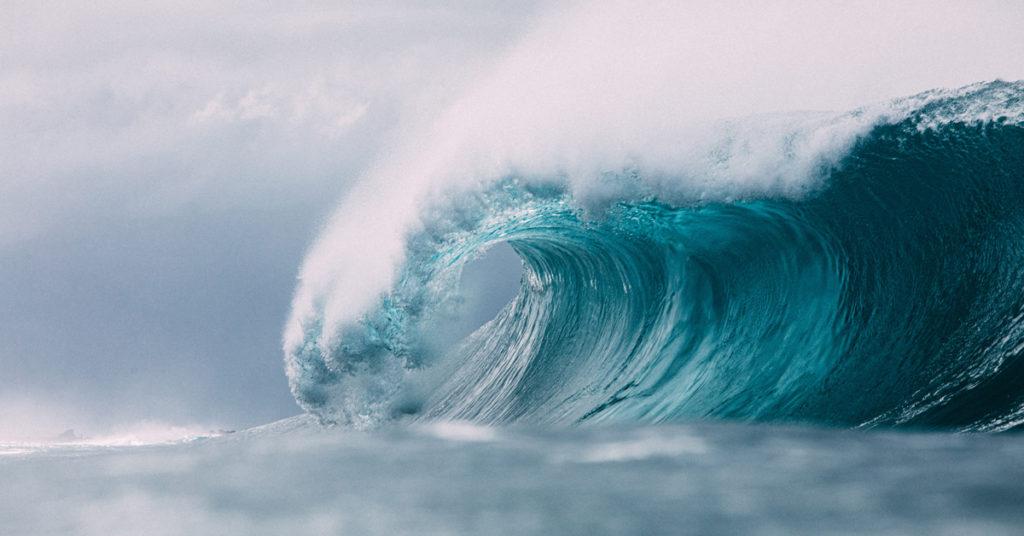
- 03 Apr 2024
Why is it in the News?
As a result of the low-pressure area formed over the Atlantic Ocean moving into the Indian Ocean, high swell waves in the range of 11 m were formed.
What Are Swell Waves?
- Swell waves are characterized by the formation of long wavelength waves on the surface of the seas, propagating along the interface between water and air.
- They are commonly known as surface gravity waves due to their nature.
Origin:
- Unlike waves generated by immediate local winds, swell waves originate from distant weather systems.
- These waves are the result of prolonged wind action over a significant area of water, known as fetch.
- Even after the wind subsides or shifts, or the waves move away from the wind source, swell waves persist and continue to propagate.
Influencing Factors:
- The speed of the wind, the extent of ocean surface area affected by consistent wind direction (fetch), and the duration of time the winds persist over the same part of the ocean are all contributing factors to the formation and behavior of swell waves.
Characteristics of Swell Waves:
- Limited Frequency and Direction Range: Swell waves exhibit a narrower range of frequencies and directions compared to wind-generated waves occurring locally.
- Defined Shape and Direction: Swell waves assume a more distinct shape and direction, displaying less randomness than waves generated by local winds.
- Directional Orientation: Unlike wind waves, swell waves are characterized by the direction from which they originate rather than where they are headed.
- Wavelength Variation: Swell waves typically possess long wavelengths, although this can vary depending on the size of the water body.
- Generally, their wavelengths seldom exceed 150 meters.
- However, on occasion, particularly severe storms may produce swells with wavelengths surpassing 700 meters.
What are the Differences Between a Normal Wave and Swell Waves?
Normal Waves:
- Random Nature: Normal waves encompass any spontaneous disturbance occurring in the sea, exhibiting a wide array of forms, types, shapes, heights, periods, directions, and speeds.
- Varied Characteristics: Waves can manifest in diverse forms and attributes, subject to the prevailing conditions in the ocean.
Swell Waves:
- Deep-water Linear Waves: Swell waves are a distinct category of deep-water, linear waves originating or emerging from a chaotic wave system during external weather events due to wave dispersion.
- Defined Characteristics: Swells travel in a specific direction as uniform, high-speed, long waves that maintain consistency over time, with speeds determined by their wavelengths and periods.
- Extensive Travel: Swell waves traverse significantly greater distances compared to typical wave packets, exhibiting remarkable endurance.
- Independence from Local Weather: Swell waves remain unaffected by local weather systems, retaining their characteristics even in the presence of nearby weather phenomena.
OptiDrop Platform
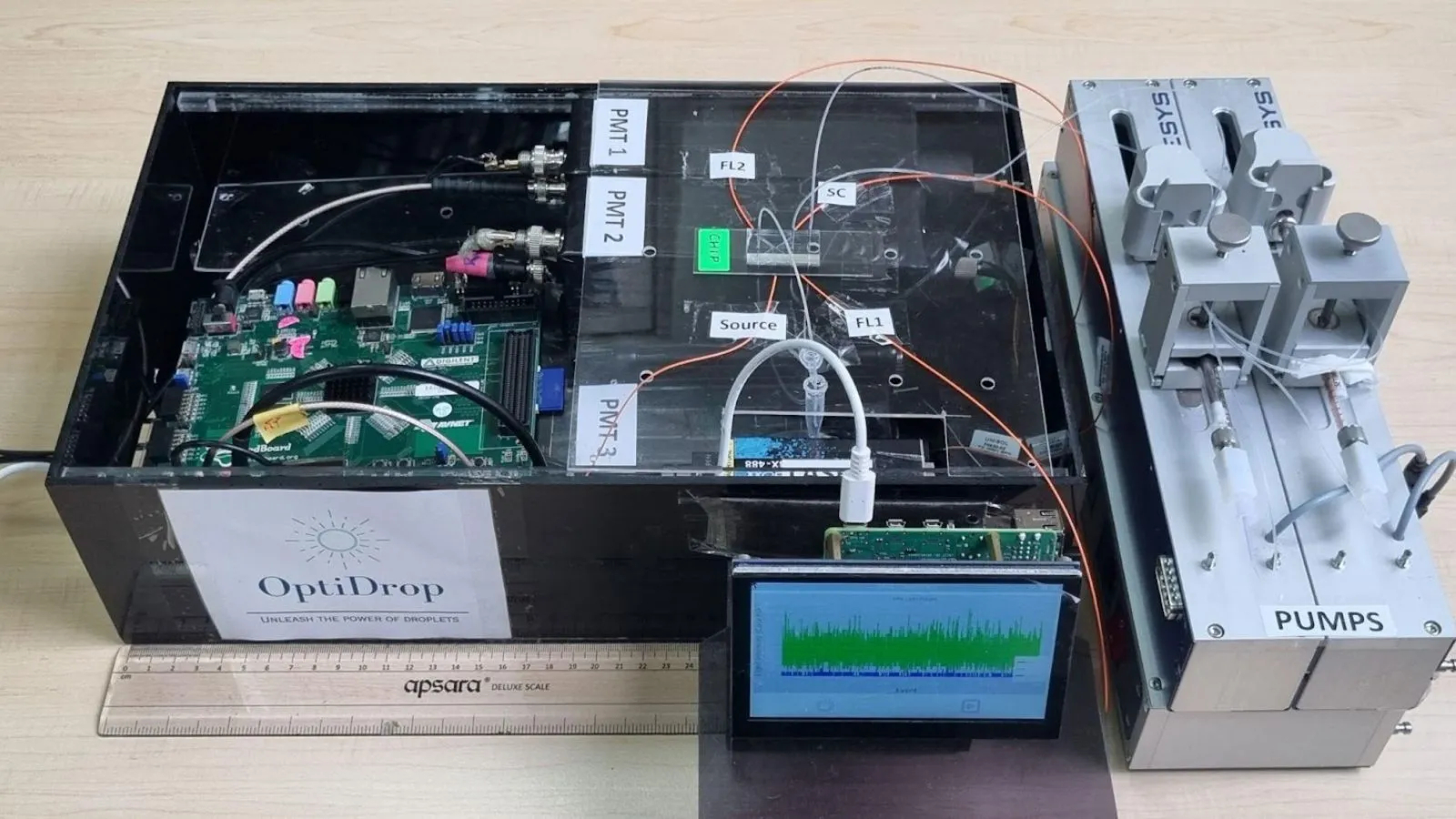
- 03 Apr 2024
Why is it in the News?
The Centre for Cellular and Molecular Platforms (C-CAMP) in Bengaluru recently announced that it has developed a new platform that makes it easier and cheaper to study single cells.
About the OptiDrop Platform:
- The OptiDrop platform is an innovative microfluidic chip-based technology that simplifies and reduces the cost of single-cell analysis.
- Developed by the Centre for Cellular and Molecular Platforms (C-CAMP) in Bengaluru, India, OptiDrop enables precise and cost-effective analysis of single cells encapsulated in droplets.
- The platform boasts unique features, including live data visualization, a smaller data footprint, and a 'closed' system design that prevents external contamination.
- OptiDrop has potential applications in diagnostics, therapeutics, agriculture, and animal health, making it a versatile tool for various research areas.
Applications:
- This cutting-edge technology holds vast potential across diverse fields including diagnostics, therapeutics, agriculture, and animal health. Its versatility enables:
- Precise examination of individual cells during drug screening processes.
- Environment control for monitoring and addressing water contamination.
- Identification and sorting of CAR-T cells in immuno-oncotherapeutics.
- Selection of CRISPR-modified single cells.
- Identifying high-efficiency clones in single-cell genomics paves the way for advancements in personalized medicine and beyond.
- This platform is a testament to the potential of combining microfluidic technologies with advanced optical sensing techniques, paving the way for more efficient and cost-effective single-cell analysis.
What is the Centre for Cellular and Molecular Platforms (C-CAMP)?
- The Centre for Cellular and Molecular Platforms, or C-CAMP, was conceptualized by the Department of Biotechnology, Govt. of India in 2009 as an enabler or catalyst of cutting-edge research and innovation in the life sciences.
- C-CAMP has established itself as a major platform technology base, industry-oriented innovation hub, and incubator unit for life science research.
- With state-of-the-art technology platforms, a rich academic environment, and networks of business and industry-related resources, it encourages researchers and entrepreneurs to develop scientific tools and solutions for socially relevant problems.
- It is an institution with the core mandate of enabling cutting-edge life science research and innovation.
Havana Syndrome
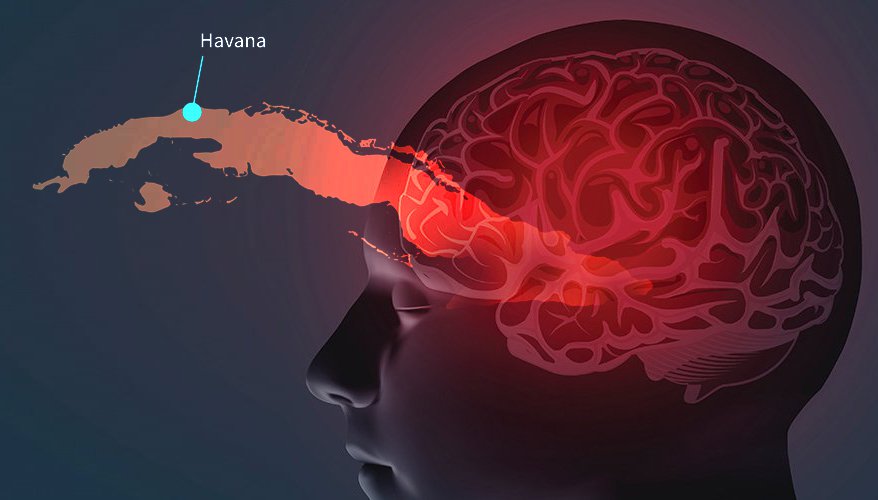
- 02 Apr 2024
Why is it in the News?
The mysterious so-called Havana Syndrome symptoms experienced by U.S. diplomats in recent years have been linked to a Russian intelligence unit, according to a joint media investigation released on April 1.
What is Havana Syndrome?
- Havana Syndrome is a term used to describe a set of mental health symptoms experienced by US intelligence and embassy officials in various countries.
- The symptoms include hearing sounds without any external noise, nausea, vertigo, headaches, memory loss, and balance issues.
- The syndrome first came to light in 2016 when US officials stationed at the country's embassy in Havana, Cuba, began reporting these symptoms.
- The exact cause of the syndrome remains unknown, but it has been linked to high-frequency microwave transmissions.
- The syndrome was named after the city where it was first reported, Havana, and has since been reported by US government officials and military personnel serving at various stations across the world.
- The symptoms of Havana Syndrome are diverse and range from pain and ringing in the ears to cognitive dysfunction.
- Some individuals have also reported hearing loss, memory loss, and nausea.
- The exact cause of these symptoms remains unknown, with theories ranging from sonic weapons to mass psychogenic illness.
- Despite ongoing investigations, there is currently no known cure for Havana Syndrome.
- Research continues into the potential causes and treatments for this perplexing condition.
Affected Regions:
- As per reports from US media outlets, over the past few years, officials have documented more than 130 instances worldwide, including in Moscow, Russia, Poland, Georgia, Taiwan, Colombia, Kyrgyzstan, Uzbekistan, and Austria, among others, with similar accusations emerging in early 2018 from US diplomats stationed in China.
- Status in India: The first such incident was reported in 2021 when a US intelligence officer accompanying CIA director William Burns to New Delhi exhibited symptoms of Havana Syndrome.
Recent Investigation Findings and Russia's Response:
- A year-long investigation revealed evidence suggesting that unexplained anomalous health incidents, commonly known as Havana Syndrome, may be linked to the use of directed energy weapons wielded by members of Russia's GRU Unit 29155, responsible for foreign operations and implicated in various international incidents, including the 2018 attempted poisoning of defector Sergei Skripal in Britain.
- Moscow has dismissed the allegations as "groundless," asserting the absence of convincing evidence, deeming the accusations baseless and unfounded.
What are Microwave Weapons?
- Microwave weapons, a type of directed energy weapon, utilize high-frequency electromagnetic radiation to generate heat in the water within a target's skin, resulting in pain and discomfort.
- Several nations are believed to have developed such weapons for use against both humans and electronic systems.
- China unveiled its "microwave weapon," the Poly WB-1, at an air show in 2014, while the United States has also designed a prototype called the "Active Denial System."
- The existence of these weapons has raised concerns regarding their potential misuse, and further research is necessary to understand their long-term effects and implications on human health and security.
Bridge Fuel

- 02 Apr 2024
Why is it in the News?
Natural gas has been called a ‘bridge fuel’ for countries looking to transition away from coal and oil dependency, and as they pursue a pathway towards renewables and electrification.
What is Bridge Fuel?
- Bridge fuel is a widely recognized term for fuels that aim to meet society's energy needs while minimizing environmental impacts during the transition to a clean, renewable energy economy.
- The primary objective of bridge fuels is to replace current fossil-fuel-dependent energy sources and pave the way for a greenhouse gas emission-free future.
- Natural gas is often considered a bridge fuel due to its lower greenhouse gas emissions during combustion compared to other fossil fuels.
- However, an ideal bridge fuel should also contribute to national energy independence and reduce pollution-related costs.
- Bridge fuels play a crucial role in balancing current energy demands with the long-term goal of achieving a sustainable, renewable energy landscape.
What is Natural Gas and How is it Formed?
- Natural gas, a non-renewable fossil fuel, is a mixture of hydrocarbon-rich gases.
- This colorless, odorless gas consists primarily of methane (70-90%), with smaller amounts of ethane and propane.
- Possible impurities include carbon dioxide, hydrogen sulfide, and nitrogen.
- Natural gas formation dates back millions to hundreds of millions of years ago when layers of organic matter (such as plants, animals, and diatoms) accumulated on land and ocean floors.
- Over time, these layers were buried under sediment and rock. Intense pressure and heat transformed this carbon and hydrogen-rich material into coal, oil, and natural gas.
- Today, natural gas reserves are found deep within the Earth's crust, often alongside other hydrocarbon deposits like coal and crude oil.
- The extraction, processing, and utilization of natural gas play a critical role in meeting global energy demands while transitioning towards cleaner, renewable energy sources.
Applications of Natural Gas:
- Natural gas undergoes processing and conversion into cleaner fuels for various applications.
- During processing, several valuable by-products like propane, ethane, butane, carbon dioxide, and nitrogen are extracted for further use.
Key uses of natural gas include:
- Generating electricity and heat, serving as a primary energy source for power plants.
- In compressed form (CNG), it fuels vehicles, providing a cleaner alternative to traditional gasoline or diesel.
- Powering boilers and air conditioning systems for residential, commercial, and industrial purposes.
- Manufacturing fertilizers, particularly ammonia, support the agricultural sector.
- As a cleaner fossil fuel, natural gas has a lower environmental impact than coal, emitting 50% less CO2.
- This makes it a critical component in the global shift towards more sustainable and eco-friendly energy solutions.
Leap Second

- 02 Apr 2024
Why is it in the News?
Glaciers are melting so fast that we may need to delay adding that 'negative leap second' to keep clocks aligned with Earth's rotation.
What Is a Leap Second?
- Leap seconds serve as a tool to synchronize global timekeeping with the Earth's gradually slowing rotation due to factors such as the melting and refreezing of ice caps.
- Introduced in the early 1970s, leap seconds are added periodically to Coordinated Universal Time (UTC) to align it with the Earth's actual rotation time.
- UTC is derived from the combined output of over 300 highly precise Atomic clocks worldwide, which offer accuracy within 1 second over millions of years.
- In contrast, Astronomical Time (UT1) corresponds to the Earth's rotation and determines day length.
- The primary reason for leap second additions is the irregularity of Earth's rotation, influenced by various factors like the moon's gravitational forces, causing ocean tides.
- This creates a gradual desynchronization between UTC and UT1. When the discrepancy between UTC and UT1 nears 0.9 seconds, a leap second is added to UTC, ensuring global timekeeping remains aligned with the Earth's rotation.
- Since its introduction, 27 leap seconds have been added to UTC, typically on June 30 or December 31.
- The leap second system continues to serve as an essential mechanism for maintaining synchronization between atomic timekeeping and the Earth's rotation.
What is Negative Leap Second?
- A negative leap second is a proposed time adjustment involving the subtraction of one second from our clocks to synchronize them with Earth's rotation.
- Unlike positive leap seconds, which are added to account for slower rotation, a negative leap second would address the Earth spinning faster than usual.
- So far, no negative leap second has been implemented since Earth's rotation has generally been slow in recent decades.
- However, as Earth's rotation has recently accelerated, timekeepers are considering using negative leap seconds for the first time.
- The International Earth Rotation and Reference Systems Service (IERS) closely monitors the Earth's rotation and determines when to add or subtract leap seconds.
- A decision to implement a negative leap second would serve as a corrective measure, ensuring our timekeeping systems remain aligned with the planet's rotation.
- While negative leap seconds have yet to be utilized, they offer a potential solution to the challenge posed by variations in Earth's rotational speed, ensuring the ongoing synchronization of our timekeeping methods with the planet's natural rhythms.
Presence of Ozone on Jupiter's Moon Callisto
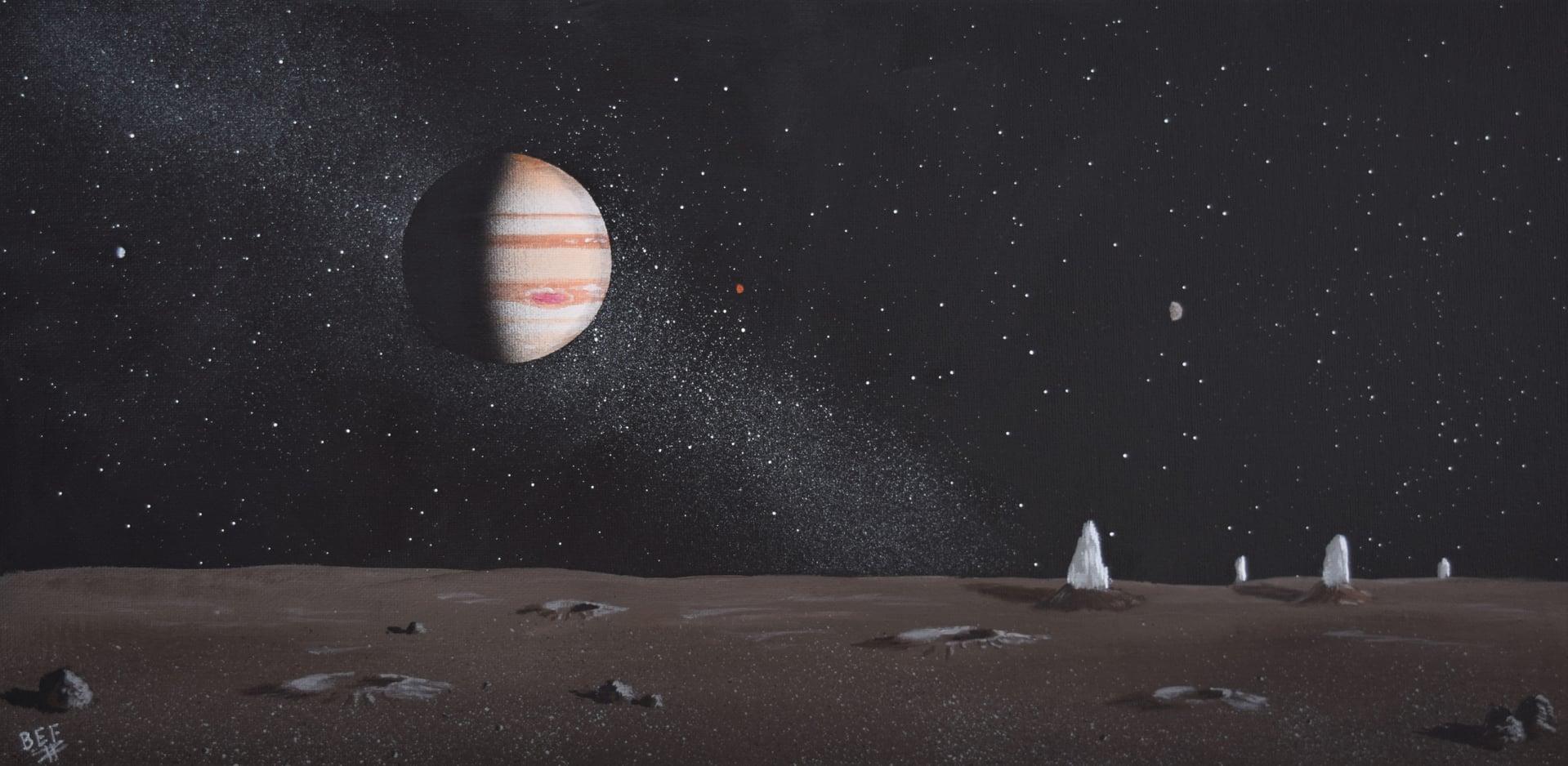
- 02 Apr 2024
Why is it in the News?
An international team of scientists, including from India, has discovered strong evidence indicating the presence of ozone on Jupiter’s moon Callisto, shedding light on the complex chemical processes taking place on icy celestial bodies in the Solar System.
Study on the Formation of Ozone in Callisto's Icy Environment:
- A recent study examined the chemical evolution of sulfur dioxide (SO2)-rich astrochemical ice found on Callisto's surface when exposed to ultraviolet (UV) radiation.
- The investigation revealed a unique signature indicating the formation of ozone, which could have implications for the potential habitability of the Jovian moon.
- Callisto is Jupiter's second-largest moon and the third-largest moon in our solar system.
- It has a relatively stable surface, which could play a vital role in preserving subsurface oceans or potential habitats beneath its icy crust.
- The study analyzed UV absorption spectra data from ice samples containing SO2, a primary component of Callisto's surface ice, and observed the generation of ozone under UV irradiation.
- Ozone formation on Callisto could have implications for the moon's astrobiological potential, as ozone can protect the surface from harmful radiation.
- Further research is needed to better understand the implications of this discovery on Callisto's habitability and the potential for future exploration missions.
Callisto's Distinctive Environment:
- Following Saturn, Jupiter boasts the second-highest number of moons in the Solar System, with Callisto ranking among its largest moons and holding the position of the third-largest moon overall, after Ganymede and Titan.
- Comprised predominantly of water ice, rocky elements, sulfur dioxide, and traces of organic compounds, Callisto presents a compelling potential for harboring life beyond Earth within the Solar System.
- The moon's extensively cratered surface bears witness to a lengthy history of impacts from asteroids and comets.
Importance of the Research:
- The identification of ozone on Callisto hints at the existence of oxygen, a crucial component essential for the development of intricate molecules vital for life, including amino acids, thus prompting inquiries into the moon's potential for sustaining life.
- This finding also has implications for other icy moons within our Solar System, offering insights that could broaden our comprehension of habitable environments beyond Earth.
Significance of Ozone:
- Consisting of three oxygen atoms bonded together, the ozone molecule plays a pivotal role in shielding life on Earth.
- Situated in the lower region of the Earth's stratosphere, approximately 15-35 kilometers above the surface, the ozone layer acts as a protective barrier.
- Without this layer, ultraviolet radiation would intensify, posing significant threats to various species and disrupting ecosystems.
- Ultraviolet-B and ultraviolet-C, with wavelengths ranging from 290 to 320 nanometers and 100 to 280 nanometers respectively, can cause DNA damage, and mutations, and elevate the risk of skin cancer and cataracts in humans.
- Furthermore, ultraviolet light can impede plant growth and adversely affect diverse organisms.
Voter Verifiable Paper Audit Trail (VVPAT)
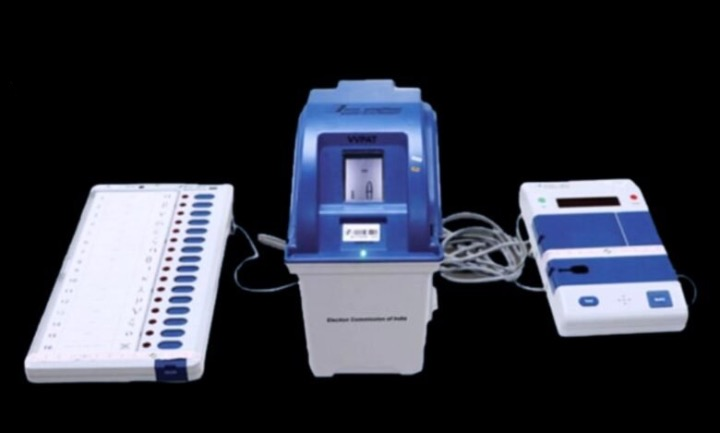
- 02 Apr 2024
Why is it in the News?
The Congress has hailed as an “important first step” the Supreme Court’s notice to the Election Commission and the Centre on a plea seeking a complete count of VVPAT slips and said the matter should be decided before the Lok Sabha polls commence.
What is the Voter Verifiable Paper Audit Trail (VVPAT)?
- The Voter Verifiable Paper Audit Trail, or VVPAT system, was first introduced in 2014 for the first time during the 2014 Lok Sabha Elections.
- The ECI conducted pilot tests of VVPAT systems in a few constituencies in 2011, and after successful trials, VVPAT was gradually deployed across all polling stations in subsequent elections.
- It is connected to Electronic Voting Machines (EVM) and enables voters to confirm that their votes were cast as intended.
- The concept of VVPAT was to enhance the credibility and transparency of EVMs.
What are VVPAT Slips?
- VVPAT slips are an integral part of the EVMs used in elections.
- It provides a physical paper trail for voters to verify that their vote has been correctly recorded by the EVM.
- It ensures transparency and accountability in the electoral process by allowing voters to verify their vote before casting it finally.
- The VVPAT produces a paper slip that permits the voter to confirm the accuracy of their vote on the EVM.
- This slip displays the name and symbol of the party chosen by the voter.
- Additionally, the machine features a transparent window through which the voter can observe the printed slip.
- Subsequently, the slip is securely deposited into a sealed compartment within the machine.
- However, in the event of a dispute, this sealed box can be opened for further examination.
Controversies Surrounding VVPAT:
- Despite its intended purpose of enhancing transparency, VVPAT has been subject to several controversies over the years.
- Some critics have raised concerns about the reliability of VVPAT systems, citing instances of malfunctioning printers, paper jams, and discrepancies between electronic and paper records.
- The Opposition parties within the INDIA bloc have been advocating for the full counting of VVPATs, to bolster public trust in the EVMs, which itself has been subjected to intense scrutiny recently.
- Their concern has mostly stemmed from allegations of delay in the printing and displaying of VVPAT slips for every vote, which they claim can significantly increase the time required for vote counting.
Supreme Court’s intervention in VVPATs:
- In April 2019, the SC asked the poll panel to increase the number of EVMs that undergo VVPAT physical verification from one to five per assembly segment in a parliamentary constituency.
- In the month of May the same year, the Supreme Court dismissed a writ petition seeking 100 percent counting of VVPAT in the 2019 Lok Sabha elections.
- Earlier in the same month, the Supreme Court had also dismissed the review petition filed by opposition parties to increase verification of VVPAT-EVM to 50 percent.
Katchatheevu Island
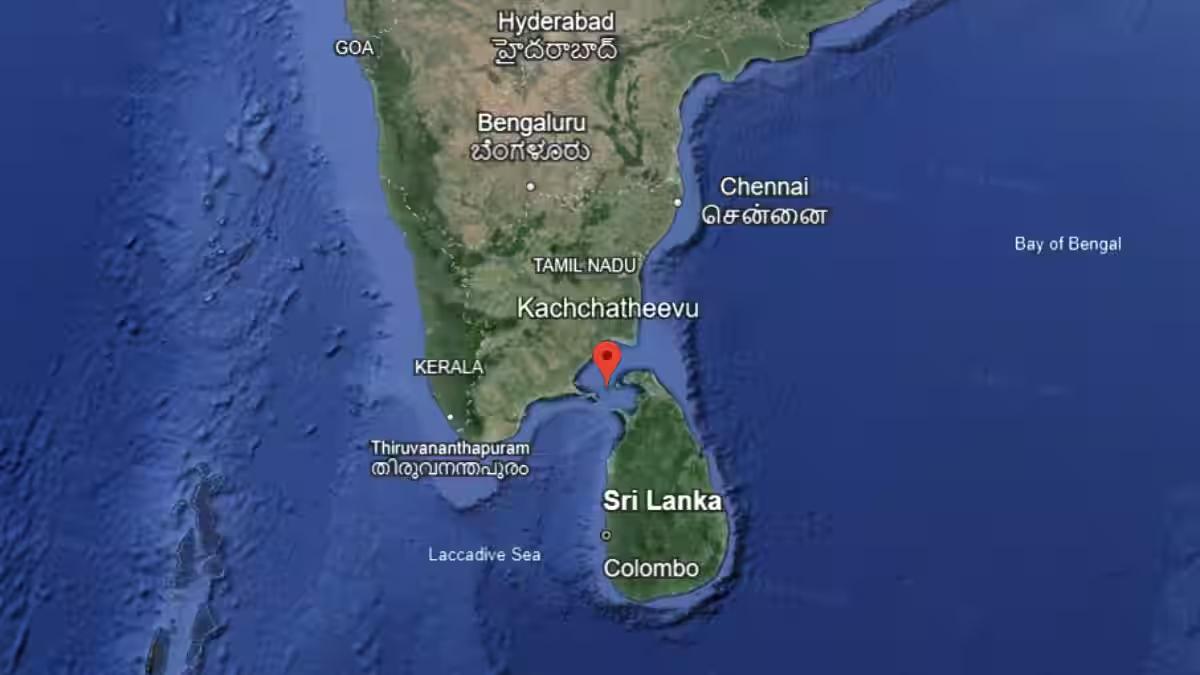
- 01 Apr 2024
Why is it in the News?
Prime Minister Narendra Modi once again attacked the Congress about its decision to “callously give away” the island of Katchatheevu.
About the Island of Katchatheevu:
- Katchatheevu is an uninhabited area located between India and Sri Lanka in the Palk Strait.
- It measures around 1.6 km in length and slightly over 300 m wide at its broadest point.
- Situated northeast of Rameswaram, it is approximately 33 km away from the Indian coast.
- Moreover, it is positioned about 62 km southwest of Jaffna, at the northern tip of Sri Lanka, and 24 km from the inhabited Delft Island, which is a part of Sri Lanka.
- Katchatheevu is not suited for permanent settlement as there is no source of drinking water on the island.
History of the island:
- Being the product of a 14-century volcanic eruption, Katchatheevu is relatively new in the geological timescale.
- In the early medieval period, it was controlled by the Jaffna kingdom of Sri Lanka.
- In the 17th century, control passed to the Ramnad zamindari based out of Ramanathapuram, about 55 km northwest of Rameswaram.
What is the dispute?
- The island became part of the Madras Presidency during the British Raj.
- But in 1921, both India and Sri Lanka, at the time British colonies, claimed Katchatheevu to determine fishing boundaries.
- A survey marked Katchatheevu in Sri Lanka, but a British delegation from India challenged this, citing ownership of the island by the Ramnad kingdom.
- This dispute was not settled until 1974.
What is the Agreement on Katchatheevu Island?
- In 1974, Indira Gandhi made attempts to settle the maritime border between India and Sri Lanka, once and for all.
- As a part of this settlement, known as the ‘Indo-Sri Lankan Maritime Agreement’, Indira Gandhi ‘ceded’ Katchatheevu to Sri Lanka.
- At the time, she thought the island had little strategic value and that ceasing India’s claim over the island would deepen its ties with its southern neighbor.
- Moreover, as per the agreement, Indian fishermen were still allowed to access Katchatheevu “hitherto”.
- Unfortunately, the issue of fishing rights was not ironed out by the agreement.
- Sri Lanka interpreted Indian fishermen’s right to access Katchatheevu to be limited to “rest, drying nets and for visit to the Catholic shrine without a visa”.
- Another agreement in 1976, during the period of Emergency in India, barred either country from fishing in the other’s Exclusive Economic Zone.
- Again, Katchatheevu lay right at the edge of the EEZs of either country, retaining a degree of uncertainty about fishing rights.
How did the Sri Lankan Civil War Impact Katchatheevu?
- Between 1983 and 2009, the border dispute remained on the back burner as a bloody civil war raged in Sri Lanka.
- With the Sri Lankan naval forces preoccupied with their task of cutting off supply lines of the LTTE based out of Jaffna, incursions by Indian fishermen well into Sri Lankan waters were commonplace.
- Bigger Indian trawlers were especially resented as they would not only tend to overfish but also damage Sri Lankan fishing nets and boats.
- In 2009, the war with the LTTE ended, and things dramatically changed. Colombo beefed up its maritime defenses and turned its focus to Indian fishermen.
- Facing a depletion of marine resources on the Indian side, they would frequently enter Sri Lankan waters as they had been doing for years, but finally began facing consequences.
- To date, the Sri Lankan navy routinely arrests Indian fishermen and there have been many allegations of custodial torture and death.
- The demand for Katchatheevu is revived each time such an incident happens.
Indian Government Stance on Katchatheevu Island:
- The Union government’s position on Katchatheevu has largely remained unchanged.
- It has argued that since the island had always been under dispute, “no territory belonging to India was ceded nor sovereignty relinquished.”
Kodaikanal Solar Observatory (KOSO)
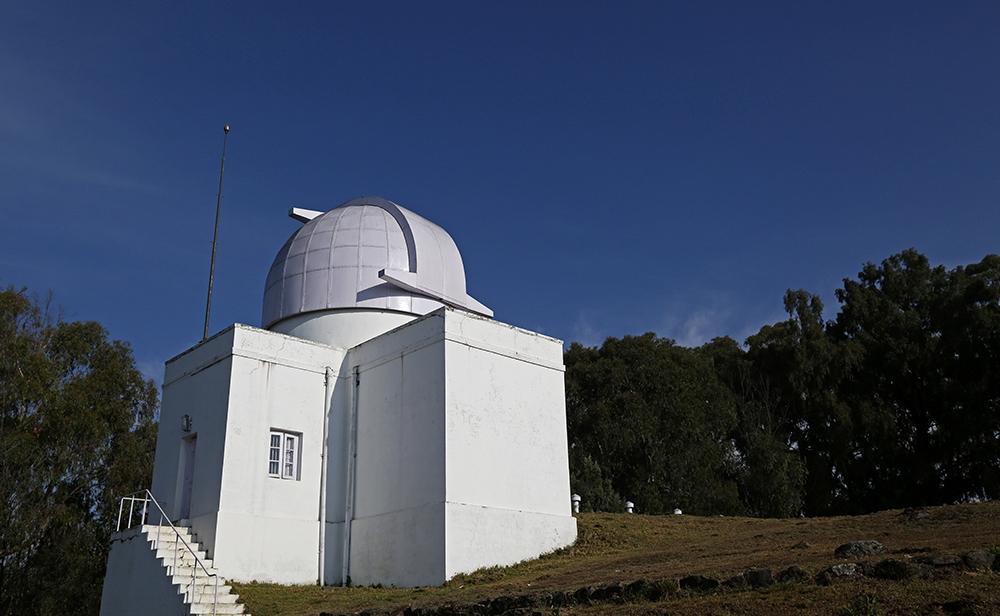
- 01 Apr 2024
Why is it in the News?
Since ancient times, seafarers, mathematicians, astronomers, and physicists have all diligently studied and tracked the Sun and its phenomena, with the establishment of the Madras Observatory by the British East India Company in 1792 marking a pioneering effort in this region.
About Kodaikanal Solar Observatory:
- The Kodaikanal Solar Observatory is a solar observatory owned and operated by the Indian Institute of Astrophysics (IIA), Bengaluru.
- It is on the southern tip of the Palani Hills 4 kilometers from Kodaikanal (Tamil Nadu).
- The Government of India separated Astrophysics from the India Meteorological Department (IMD) in April 1971.
- From solar data recorded on basic photographic plates or films, the 125-year-old KoSO boasts a mammoth digital repository containing 1.48 lakh digitized solar images of 10 terabytes.
- These include 33,500 white-light images (showing sunspots) and thousands of other images of the Sun recorded every day since the start of the 20th century.
- KoSO is the only observatory offering high-resolution digitized images for such a long period (with coverage of more than 75 percent).
- Today, it houses a spectrum of advanced instruments like the H-alpha telescope to perform full disc imaging, a White light Active Region Monitor (WARM) with calcium and sodium filters to make full disc simultaneous observations of the photosphere and chromosphere layers of the Sun, a solar tunnel telescope and more.
Links to the Great Drought:
- Scanty rainfall over south India during the winter monsoon of 1875 triggered one of the worst droughts the country had experienced till then.
- Multiple failed crops over the famine-stricken peninsular India killed 12.2 to 29.3 million people across the Madras and Mysore Provinces during 1875-1877.
- India, along with China, Egypt, Morocco, Ethiopia, southern Africa, Brazil, Columbia, and Venezuela, suffered concurrent multi-year droughts during 1876-1878, later named the Great Drought, and an associated global famine that killed nearly 50 million.
- The drought was thought to be due to multiple reasons:
- Solar activity
- Cool Pacific Ocean conditions followed by a record-breaking El Nino (1877-1878)
- Strong Indian Ocean Dipole and
- Warm North Atlantic Ocean conditions.
Solar Physics Observatory in Palani Hills:
- Established in response to the British Raj's acknowledgment of solar activity's link to India's weather patterns, the Palani Hills Solar Physics Observatory, also known as the Indian Solar Observatory, was founded to conduct systematic studies on solar phenomena and their correlation with Indian meteorology.
- Located in Kodaikanal, selected for its favorable atmospheric conditions after careful consideration by Charles Michie Smith (a Professor of Physics at the Madras Christian College), the observatory was officially sanctioned by the Government of India in August 1893 and inaugurated by Lord Wenlock (the then Governor of Madras) in 1895.
- Commencing systematic observations in 1901, it merged with the Madras Observatory, enriching its instrumentation.
- Notable discoveries ensued, including the identification of the Evershed Effect.
- Over time, the observatory expanded its research domains to encompass cosmic rays, radio astronomy, and ionospheric physics, among others, solidifying its status as a pioneering institution in the field of astrophysics.
- Notably, it initiated solar radio observations in 1952, marking a significant milestone in Indian solar research.
- Despite the closure of contemporaneous observatories, the Palani Hills Solar Physics Observatory has endured, continuing to contribute to our understanding of the Sun and its effects on Earth's climate and space weather.
Why Study the Sun?
- Being the primary source of energy, life on Earth is supported by the Sun.
- Any change on the solar surface or its periphery could significantly affect the Earth’s atmosphere.
- Powerful solar storms and solar flares can be potentially harmful to Earth’s satellite-based operations, power grids, and navigational networks.
- The KoSO (Kodaikanal Solar Observatory), which has been imaging the Sun for over a century now, has a rich repository of data.
- This is extremely useful not only to reconstruct the Sun’s historic past but also to link its behavioral changes to better understand and predict its future and its impact on life on Earth and Space weather.
Fukushima Water Issue
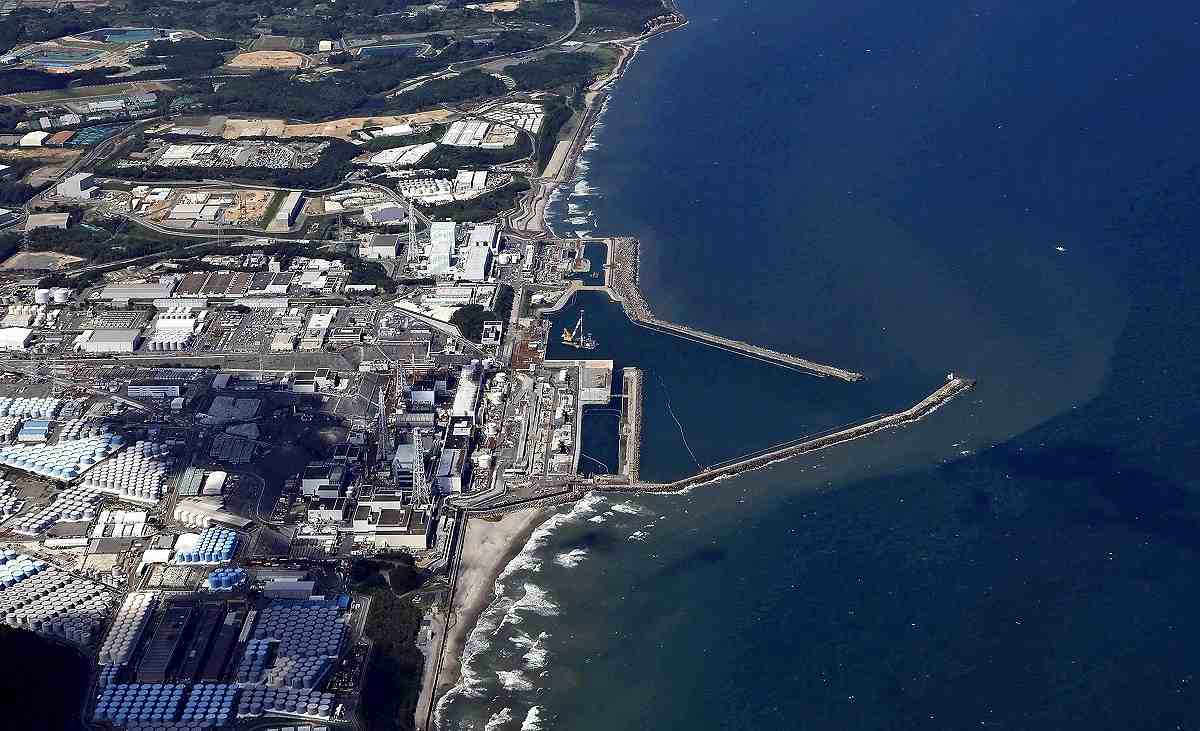
- 01 Apr 2024
Why is it in the News?
Recently, Japan announced that its experts have engaged in discussions with their Chinese counterparts to address Beijing's concerns regarding the release of treated radioactive wastewater from the damaged Fukushima Daiichi nuclear power plant into the sea.
What is the Fukushima Water Issue?
- In 2021, the Japanese government unveiled plans to gradually discharge over one million tonnes of contaminated water from the Fukushima nuclear plant into the ocean over the next three decades.
- The contaminated water is a residual product of the devastating 2011 earthquake and tsunami that incapacitated the Fukushima Daiichi nuclear power plant, resulting in the release of radioactive materials.
- After more than ten years of storing this wastewater, Japan asserts that they are facing storage space limitations and contends that the treated water is now safe for release.
Concerns Surrounding the Fukushima Water Discharge:
- Tritium and Carbon-14: The water from Fukushima undergoes filtration via the Advanced Liquid Processing System (ALPS), effectively reducing most radioactive contaminants to acceptable safety levels, except tritium and carbon-14.
- While both emit low levels of radiation, consumption in large quantities could potentially pose risks.
- Insufficient Research: Scientists emphasize the need for further investigation into the potential impact of the water discharge on the ocean bed and marine ecosystems.
- The Pacific Islands Forum regional group has labeled the proposed plan as "another significant nuclear contamination disaster," citing ongoing challenges faced by its member nations due to past US nuclear testing.
Pacific Islands Forum (PIF):
- The Pacific Islands Forum (PIF) is an inter-governmental organization that aims to enhance cooperation among countries and territories of Oceania, including the formation of a trade bloc and regional peacekeeping operations.
- It was founded in 1971 as the South Pacific Forum (SPF), and changed its name in 1999 to "Pacific Islands Forum", to be more inclusive of the Forum's Oceania-spanning membership of both north and south Pacific island countries, including Australia.
- It is a United Nations General Assembly observer.
- The PIF secretariat is located in Suva, the capital of Fiji.
Nuclear Incidents:
- A nuclear and radiation incident denotes an occurrence that has resulted in significant repercussions for individuals, the environment, or the facility involved.
- These may entail fatal consequences for individuals, substantial releases of radioactivity into the environment, or reactor core meltdowns.
- Globally, there have been a total of 99 incidents at nuclear power plants.
- Fifty-seven of these incidents have transpired since the Chornobyl disaster, with the United States accounting for 57% of all nuclear-related incidents.
- Noteworthy nuclear power plant mishaps encompass:
- Fukushima Daiichi nuclear disaster (2011)
- Chernobyl disaster (1986)
- Three Mile Island accident (1979), and
- The SL-1 accident (1961).
Real Estate (Regulation and Development) Act, 2016

- 01 Apr 2024
Why is it in the News?
Eight years after Parliament passed the Real Estate (Regulation and Development) Act, 2016, the Union Ministry of Housing and Urban Affairs is in the process of reviewing the functioning of the Act, including by holding regular meetings with homebuyers and setting up a data collection unit within the Ministry.
What Is Real Estate (Regulation & Development) Act, 2016 (RERA)?
- The Real Estate (Regulation & Development) Act, 2016 is an act of the Parliament of India that strives to protect home buyers and helps escalate the investment made in the real estate industry.
- It was established under this Act to regulate the real estate sector.
- Additionally, it acts as the adjudicating body for faster dispute resolution related to the real estate industry.
The Primary Objectives of the Act:
- Ensuring Transparency: Promoting transparency in the real estate sector regarding the sale of flats, apartments, plots, buildings, or any real estate project.
- Establishing Dispute Resolution: Setting up an adjudicating mechanism to swiftly resolve disputes.
- Protecting Buyer Interests: Safeguarding the interests of buyers/allottees in the real estate domain.
- Building Trust: Fostering trust between buyers and promoters by leveraging regulatory authority.
- Furthermore, the Act mandates that Real Estate Regulatory Authorities establish and maintain a web portal containing pertinent details of all registered real estate projects for public access.
Reasons for RERA Implementation:
- The introduction of RERA was necessitated by challenges faced by the Indian real estate sector since 2012, including factors such as unemployment, recession, low rental yield, inventory pile-up, and ambiguous tax and arbitration frameworks.
Projects Covered by RERA:
- RERA covers commercial and residential projects, including plotted developments, that exceed 500 square meters or comprise more than 8 units.
- Additionally, projects lacking a Completion Certificate prior to the Act's commencement are subject to its provisions.
Benefits of RERA Implementation:
- Standardization: RERA ensures uniformity in the real estate sector concerning aspects like carpet areas and common areas, thereby preventing malpractices such as alterations in layout, area, agreements, and specifications.
- It also mandates disclosure of details regarding brokers, architects, and contractors.
- Timely Delivery: Developers are obligated to adhere to scheduled delivery timelines for office spaces or homes.
- Failure to comply may result in stringent penalties or imprisonment for the developer.
- Regulatory Compliance: RERA mandates obtaining clearance from government departments before the sale of any residential or commercial property.
- Financial Transparency: Developers are required to maintain separate bank accounts for each project, enhancing financial transparency and accountability.
- Warranty Protection: Buyers are empowered to report any structural defects in the building to the developer within one year of possession, with the developer obligated to rectify them free of charge.
Challenges Associated with RERA:
- Limited Scope: The regulations of RERA do not extend to ongoing projects or those stalled due to clearance issues, potentially leaving certain projects outside its jurisdiction.
- Approval Delays: Delays in approval and clearance from government agencies may impede the timely completion and delivery of real estate projects, affecting both developers and buyers.
- Exemption for Small Developers: Small-scale developers overseeing projects smaller than 500 square meters are exempt from RERA's provisions, and registration with the regulatory authority is not compulsory for them.
- Project Launch Delays: Projects cannot be launched without necessary clearances, which may result in delays in the commencement of new projects.
International Network for Terrestrial Research and Monitoring in the Arctic (INTERACT)

- 01 Apr 2024
Why is it in the News?
In a recent development, Arctic research stations under INTERACT reported a significant loss of over 1,000 billion tonnes of ice over the past four decades.
About the International Network for Terrestrial Research and Monitoring in the Arctic (INTERACT):
- The International Network for Terrestrial Research and Monitoring in the Arctic (INTERACT) is an infrastructure project under the auspices of SCANNET.
- INTERACT specifically seeks to build capacity for research and monitoring in the European Arctic and beyond and is offering access to numerous research stations through the Transnational Access program.
- It aims to build capacity for identifying, understanding, predicting, and responding to diverse environmental changes throughout the wide environmental and land-use envelopes of the Arctic.
- The project, which is funded by the EU, has the main objective of building capacity for identifying, understanding, predicting, and responding to diverse environmental changes throughout the wide environmental and land-use envelopes of the Arctic.
- INTERACT is a multidisciplinary initiative; collectively, its stations host thousands of scientists worldwide who collaborate on projects spanning glaciology, permafrost studies, climate research, ecology, biodiversity, and biogeochemical cycling.
About the Scandinavian Network for Coordinated Observation of the Atmosphere and Terrestrial Environment (SCANNET):
- SCANNET is a circum-Arctic network of currently 77 terrestrial field bases in northern Europe, Russia, the US, Canada, Greenland, Iceland, the Faroe Islands, and Scotland as well as stations in northern alpine areas.
- The primary aim of SCANNET is to facilitate coordinated observations and research activities focused on the atmosphere and terrestrial environment in the Arctic region.
- These observations cover a wide range of scientific disciplines, including meteorology, climatology, ecology, geology, and environmental science.
- By leveraging the diverse geographical locations of its field bases, SCANNET enables scientists to study various environmental phenomena, such as changes in weather patterns, shifts in ecosystems, permafrost dynamics, and the impact of climate change on Arctic landscapes.
- Moreover, SCANNET serves as a platform for collaboration and information sharing among researchers from different institutions and countries.
- It fosters partnerships and promotes the exchange of data, methodologies, and best practices, thereby enhancing our understanding of Arctic processes and their global implications.
X-Class Solar Flares

- 30 Mar 2024
Why is it in the News?
Recently the Earth was hit by an X-class solar flare that was strong enough to ionize part of the planet's atmosphere.
What are Solar Flares?
- Solar flares are large explosions from the surface of the sun that emit intense bursts of electromagnetic radiation.
- The intensity of the explosion determines what classification the flare belongs to.
- The most powerful are X-class flares, followed by M-, C-, and B-class; A-class flares are the smallest.
- These flares can be visible as bright flashes in a particular region of the sun and can last several minutes.
- Solar flares occur when magnetic energy builds up in the solar atmosphere and is released suddenly.
- These outbursts are intrinsically linked to the solar cycle — an approximately 11-year cycle of solar activity driven by the sun's magnetic field.
What Causes Solar Flares?
- The sun's surface is a magnetically mixed-up place.
- Magnetic fields are created from electrically charged gases generating electrical currents that act as a magnetic dynamo inside the sun.
- These magnetic fields twist, tangle, and reorganize themselves due to the turbulent nature of the gases that create them.
- This unsettled magnetic field behavior — also known as solar activity — can trigger solar flare eruptions from the surface that release vast amounts of electromagnetic radiation — a form of energy that includes radio waves, microwaves, X-rays, gamma rays, and visible light.
- Solar flares tend to originate from regions of the solar surface that contain sunspots — darker, cooler portions of the solar surface where magnetic fields are particularly strong.
- As such, the number of sunspots can indicate the likelihood of a solar flare eruption.
- Solar activity follows an approximately 11-year cycle with the peak of sunspot activity coinciding with the solar maximum and a sunspot hiatus coinciding with the solar minimum.
- During periods of low solar activity when no sunspots are present, it is unlikely that a solar flare will occur.
What are X-Class Solar Flares?
- Solar flares are categorized into five classes based on the intensity of emitted X-rays, with each class letter denoting a 10-fold increase in energy output, akin to the Richter scale for earthquake strength assessment.
- X-class flares are the most powerful solar flares.
- Then there are M-class flares that are 10 times smaller than X-class flares, then C-class, B-class, and finally A-class flares which are too weak to significantly affect Earth.
- Within each letter class, a finer scale from 1 to 9 gives the flare assessment greater precision with larger numbers representing more powerful flares within the class.
- However, X-class flares can break this nine-point rating mold with higher ratings, since there is no class more powerful than X-class.
- Fortunately, X-class flares occur on average about 10 times per year.
How do Solar Flares Affect the Earth?
- Disruption of Satellite Communications: Solar flares can interfere with satellite communications, GPS signals, and radio transmissions, causing disruptions or blackouts in telecommunications and navigation systems.
- Auroral Displays: Intense solar flares can trigger colorful auroras, or Northern and Southern Lights, as charged particles interact with Earth's magnetic field, creating stunning light displays in the polar regions.
- Power Grid Disturbances: Severe solar flares have the potential to induce geomagnetic storms that can overload power grids, leading to widespread power outages and damage to electrical infrastructure.
- Radiation Hazards: Solar flares emit harmful radiation, particularly in the form of ultraviolet and X-rays, which can pose risks to astronauts in space and airline passengers at high altitudes.
- Impact on Electronics: The influx of charged particles during solar flares can induce currents in electrical circuits, potentially damaging or disrupting sensitive electronic devices, such as computers, satellites, and spacecraft.
Vaikom Satyagraha
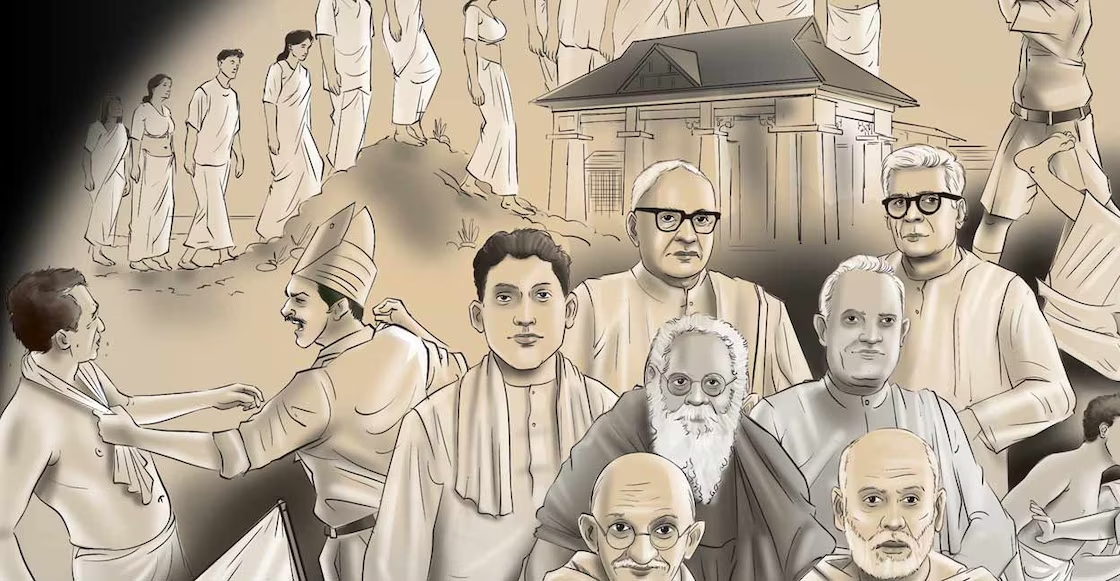
- 30 Mar 2024
Why is it in the News?
Vaikom, a temple town in the princely state of Travancore, saw the start of a non-violent agitation on March 30, 1924 — the first among temple entry movements that would soon sweep across the country.
What is Vaikom Satyagraha?
- Vaikom Satyagraha was a significant non-violent protest against the caste-based discrimination prevalent in the princely state of Travancore, characterized by a feudal, militaristic governance system entrenched with rigid social norms and customs.
- Discriminatory practices, such as the prohibition of lower castes like the Ezhavas and Pulayas from temple entry and even walking on roads near temples, were pervasive.
Contribution of Leaders:
- In 1923, the issue was brought to attention as a resolution by Madhavan during the Kakinada meeting of the All India Congress Committee.
- Subsequently, the Kerala Pradesh Congress Committee formed the Congress Untouchability Committee in January 1924 to address the matter.
- Pioneers of the Vaikom Satyagraha movement include Madhavan, K.P. Kesava Menon, then secretary of the Kerala Pradesh Congress Committee, and K. Kelappan, a prominent Congress leader and educationist known as Kerala Gandhi.
Factors Leading to Satyagraha:
- The expansion of Christian missionaries, backed by the East India Company, led to conversions among lower castes seeking liberation from an oppressive system.
- Maharaja Ayilyam Thirunal initiated several progressive reforms, notably the establishment of a modern education system providing free primary education for all, including lower castes.
- These reforms, alongside the influence of capitalism, contributed to the emergence of new social hierarchies, sometimes conflicting with traditional ones.
Commencement of Satyagraha:
- On March 30, 1924, the Satyagrahis embarked on a procession towards the restricted public roads, where a board warned oppressed communities against walking (near the Vaikom Mahadeva temple).
- Despite being halted 50 yards away, individuals such as Govinda Panikkar (Nair), Bahuleyan (Ezhava), and Kunjappu (Pulaya), adorned in khadi attire, courageously defied the prohibition orders.
- Subsequently, they were stopped by the police and, in protest, sat on the road, resulting in their arrest.
- Following this incident, three volunteers from different communities were designated each day to walk on the prohibited roads. Within a week, the movement's leaders were all apprehended by authorities.
Role of Women:
- Large-scale participation of women was witnessed for the first time during the Satyagraha, marking the passage of women into the socio-political consciousness of the country.
- Nagammai, the wife of Periyar, and Kannammal, his sister, played unprecedented roles in the struggle.
Arrival of Gandhi:
- In March 1925, Gandhi arrived at Vaikom and engaged in discussions with leaders from various caste groups.
- He also met with the Maharani Regent at her Varkala camp.
Withdrawal of Vaikom Satyagraha:
- The Vaikom Satyagraha was officially terminated on November 30, 1925, following consultations between Gandhi and W.H. Pitt, the police commissioner of Travancore.
- A compromise was reached, leading to the release of all prisoners and the granting of access to roads.
Temple Entry Proclamation:
- In 1936, the historic Temple Entry Proclamation was signed by the Maharaja of Travancore, abolishing the age-old ban on temple entry.
Significance:
- During a period of growing nationalist fervor and widespread agitation, the Vaikom Satyagraha emerged as a pivotal catalyst for social reform.
- Introducing Gandhian principles of nonviolent resistance to Travancore for the first time, marked a significant departure from traditional modes of protest.
- Enduring for over 600 consecutive days, despite social pressure, police interventions, and even a natural disaster in 1924, the steadfastness of the movement is commendable.
- The Vaikom Satyagraha fostered unprecedented unity across caste lines, showcasing a remarkable display of solidarity among diverse communities.
India-led ‘Group of Friends’
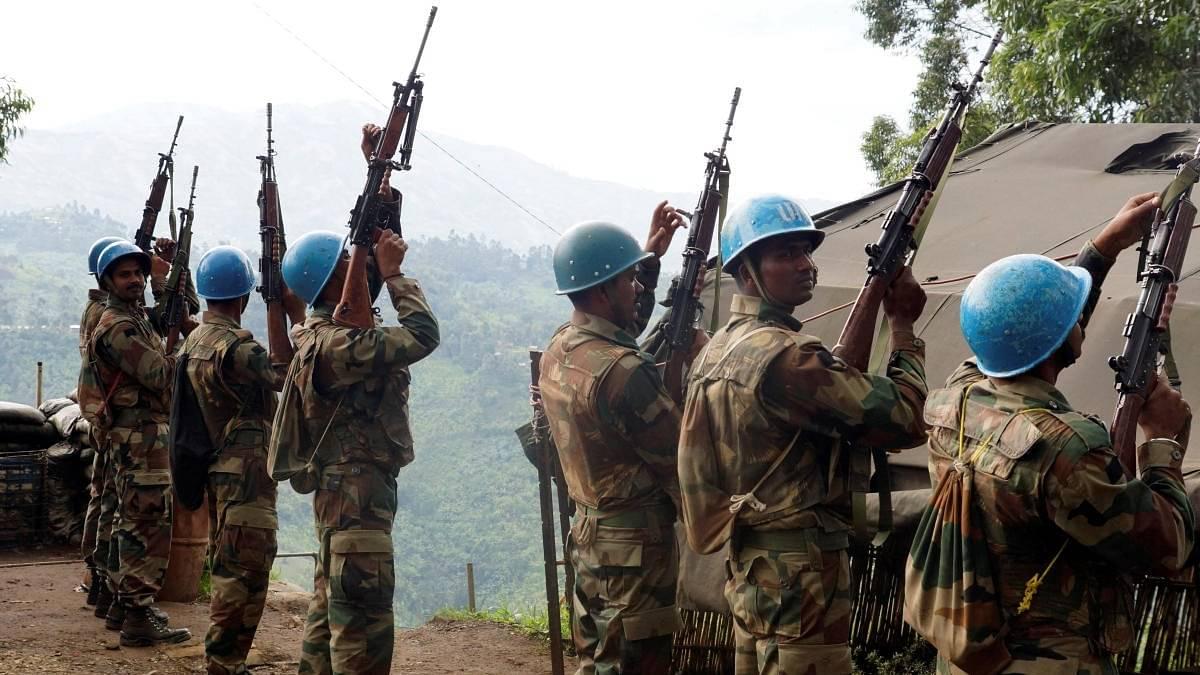
- 30 Mar 2024
Why is it in the News?
At a high-level meeting of the India-led 'Group of Friends (GOF), India launched a new database designed to record crimes against UN peacekeepers and monitor progress in holding perpetrators accountable.
About the 'Group of Friends':
- The Group of Friends (GOF) was launched by India in 2022 to promote accountability for crimes against the Blue Helmets during its presidency of the UN Security Council.
- India, Bangladesh, Egypt, France, Morocco, and Nepal are co-chairs of the GOF, which comprises 40 member states.
Key objectives of the group include:
- Engaging and sharing information with the UN Secretary-General to assist member states hosting or having hosted peacekeeping operations in bringing perpetrators of crimes against peacekeepers to justice.
- Serving as an informal platform at the UN to exchange information, share best practices, and mobilize resources to facilitate accountability for crimes against peacekeepers.
- Monitoring progress on bringing accountability for crimes against peacekeepers.
- The 'Group of Friends' will convene two meetings of its members per year and organize one event annually involving Permanent Missions and other stakeholders, ensuring greater safety and security for peacekeepers.
- This initiative represents the political will of member states, particularly troop and police contributing countries, to champion the implementation of UN Security Council resolution 2589, adopted in August 2021 under India's Presidency of the Council.
- Resolution 2589 called upon member states hosting or having hosted UN peacekeeping operations to take all appropriate measures to bring to justice perpetrators of violence against UN personnel, including their detention and abduction.
- The 'Group of Friends serves as a crucial platform for advancing this resolution, promoting accountability, and enhancing the protection of peacekeepers worldwide.
India's Significant Role in UN Peacekeeping:
- As a longstanding advocate for global peace and stability, India has demonstrated its commitment to United Nations (UN) peacekeeping operations.
- Over the past seven decades, India has contributed more than 260,000 peacekeepers, making it the largest cumulative contributor to UN peacekeeping missions.
- Despite the risks associated with such endeavors, India has remained steadfast in its support of peacekeeping efforts.
- Tragically, 177 Indian peacekeepers have made the ultimate sacrifice in the line of duty, reflecting India's dedication to fostering stability worldwide.
- Presently, India has more than 6,000 peacekeepers deployed in nine out of the twelve UN peacekeeping missions.
- As a strong proponent of accountability for crimes against peacekeepers, India plays a crucial role in advocating for the safety and security of these dedicated personnel.
C-Vigil App
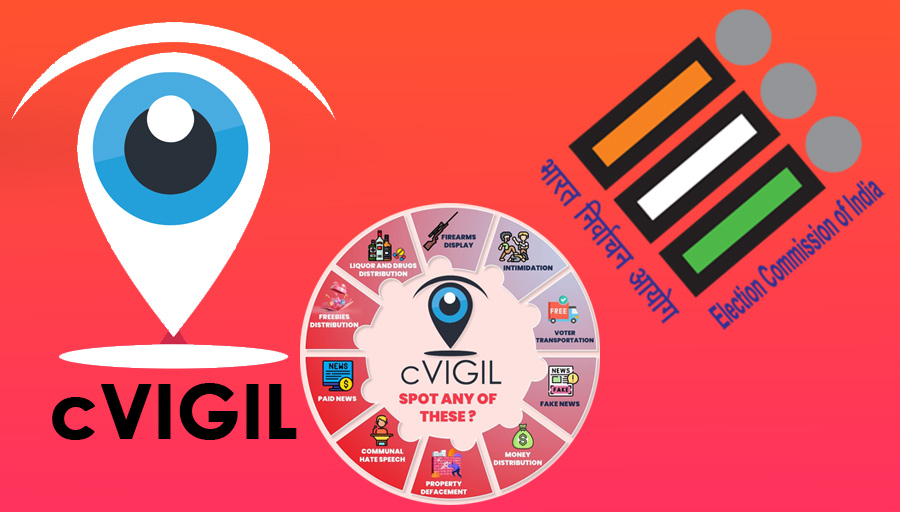
- 30 Mar 2024
Why is it in the News?
Ever since the general election was announced two weeks ago, a total of 79,000 violations have been reported on the Election Commission of India’s (ECI) cVigil app across the country.
About C-Vigil App:
- cVigil is a user-friendly and easy-to-operate application, that connects vigilant citizens with the District Control Room, Returning Officer and Field Unit (Flying Squads), or Static Surveillance Teams.
- By using this app, citizens can immediately report incidents of political misconduct within minutes and without having to rush to the office of the returning officer.
- As soon as the complaint is sent on the cVigil app, the complainant receives a unique ID, through which the person will be able to track the complaint on their mobile.
- This creates a rapid and accurate reporting, action, and monitoring system.
The cVIGIL app enabled voters to
- Register Complaints: The app allows every citizen within the election boundaries to report the Model Code of Conduct / Expenditure Violations by taking photos/audio/video through their mobile phones by signing into the application.
- Anonymous User: The app also allows the citizen to complain anonymously, without revealing their details/ identity.
- Geotagging: The app automatically enables a geo-tagging feature when users switch on their camera in the cVIGIL to report a violation, which helps the field unit to know the precise location of the incident.
Benefits of the Application:
- cVIGIL is a convenient and user-friendly app allowing citizens to send pictorial evidence of the model code of conduct violations in their vicinity.
- Each reported incident is tracked and scrutinized from the beginning to the endpoint, thus bringing accountability into the system.
- The immediate location verification feature of the cVIGIL will act as a strong deterrence for miscreants and wrong-doers as they can be easily tracked.
- A combination of all these factors will encourage citizens to keep vigil over unhealthy electoral practices and bring them to the notice of the Election Commission.
- This in turn will help the commission reach its objective of conducting free and fair elections.
Hume’s Empathic Voice Interface (EVI)

- 30 Mar 2024
Why is it in the News?
AI startup Hume unveiled a new voice interface yesterday that the company claims is “the first conversational AI with emotional intelligence.
What is an Empathic Voice Interface (EVI)?
- Empathic Voice Interface (EVI) by Hume, a New York-based research lab and technology company, is the world’s first emotionally intelligent voice AI.
- It accepts live audio input and returns both generated audio and transcripts augmented with measures of vocal expression.
- By processing the tune, rhythm, and timbre of speech, EVI unlocks a variety of new capabilities, like knowing when to speak and generating more empathic language with the right tone of voice.
- These features enable smoother and more satisfying voice-based interactions between humans and AI, opening new possibilities for personal AI, customer service, accessibility, robotics, immersive gaming, VR experiences, and much more.
- Developers can now seamlessly integrate EVI into various applications using Hume’s API, offering a unique voice interface experience.
EVI boasts several distinctive empathic capabilities:
- Human-Like Tone: EVI responds with tones resembling human expressions, enhancing the conversational experience.
- Responsive Language: It adapts its language based on the user’s expressions, addressing their needs effectively.
- State-of-the-Art Detection: EVI uses the user’s tone to detect the end of a conversation turn accurately, ensuring seamless interactions.
- Interruption Handling: While it stops when interrupted, EVI can effortlessly resume from where it left off.
- Self-Improvement: EVI learns from user reactions to continuously improve and enhance user satisfaction over time.
- In addition to its empathic features, EVI offers fast, reliable transcription and text-to-speech capabilities, making it versatile and adaptable to various scenarios.
- It seamlessly integrates with any Language Model Library (LLM), adding to its flexibility and utility.
What is an AI with Emotional Intelligence and How Can it be Used?
- Artificial Intelligence with emotional intelligence, also known as affective computing or emotion AI, refers to the integration of emotional awareness and intelligence into AI systems, enabling them to recognize, understand, and respond to human emotions.
- This capability draws inspiration from the concept of emotional intelligence in humans, which involves perceiving and managing emotions in both oneself and others.
- The development of emotionally intelligent AI involves leveraging advanced techniques in machine learning, natural language processing, and computer vision to enable AI systems to recognize emotions in facial expressions, speech, and text.
- These systems can adapt their responses based on recognized emotions, creating more empathetic and nuanced interactions between humans and AI.
Potential applications of AI with emotional intelligence include:
- Healthcare: Emotion-sensitive AI could help detect depression, anxiety, or other mental health issues by analyzing speech patterns, facial expressions, or social media posts.
- Education: AI systems could adapt to individual students' emotions, providing customized support and facilitating better learning experiences.
- Customer Service: Emotion AI could enable businesses to respond more appropriately to customer emotions, improving customer satisfaction and fostering long-term loyalty.
- Entertainment: Affective computing could make games and other entertainment experiences more immersive and engaging by adapting to users' emotions in real-time.
Great Indian Bustard (GIB)

- 29 Mar 2024
Why is it in the News?
The Supreme Court last week said it will review its April 2021 order to bury underground all power lines in the habitat of the Great Indian Bustard (GIB), after the Centre found the order “practically impossible to implement” over long distances.
About Great Indian Bustard:
- Great Indian Bustard (GIB) is an agro-grassland bird endemic to the Indian Subcontinent.
- Known locally as Godawan in Rajasthan, it is a Critically Endangered species as per the IUCN Red List.
- It belongs to the family Otididae and exhibits sexual dimorphism.
- The GIB is an omnivorous bird.
- The species has a current viable population of around 150 individuals in India and mainly survives in the Thar Desert of Rajasthan which holds about 100 individuals.
- Of the remaining individuals, these birds are found in Gujarat, Maharashtra, Karnataka, and Andhra Pradesh respectively.
- With fewer than 150 individuals, they are caught in a deadly maze of power lines that crisscross its last refuge in the Kutch and Thar deserts of western India.
Why Do Power Lines Kill Bustards?
- Power lines pose a risk to all flying birds.
- In 2020, a study carried out by the Wildlife Institute of India (WII) in 4,200 sq km of GIB habitat in and around Desert National Park (DNP) in Rajasthan estimated that power lines killed around 84,000 birds of multiple species every year.
- GIBs are especially vulnerable because of their narrow frontal vision and large size.
- Unlike some birds that have a panoramic vision around the head, species like raptors and bustards have extensive blind areas above their heads.
- When they stretch their head forward to scan the ground below, they fly blind in the direction of travel.
Arguments of the Centre:
- The Centre said taking lines of 66 KV and higher voltage underground was not feasible for the evacuation of bulk power due to constraints such as transmission losses, maintenance challenges, multiple cable joints, increased time requirements, and safety concerns.
- The cost implications of undergrounding all power lines in the large area identified are very heavy — running into many thousands of crores and the cost of externalities that will burden the nation was “huge” and “disproportionate”.
- Harnessing renewable power from high-potential areas of Rajasthan and Gujarat was “essential for meeting rising power demand and India’s international commitments on climate change”.
Other threats faced by GIB:
- Free-ranging dogs pose a significant threat to the Great Indian Bustard (GIB) population, particularly in the Thar landscape, with feral packs responsible for a substantial portion of Chinkara depredation in the Desert National Park (DNP) as of 2017.
- Although sporadic hunting of GIBs persists, the prevalent use of pesticides in agricultural areas poses a more substantial risk to the bird's survival.
- Additionally, habitat loss, particularly the decline of grasslands essential for nesting, and diminishing support from local communities are growing concerns.
CoViNet
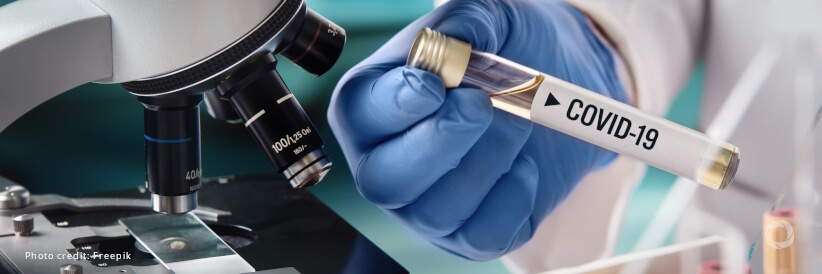
- 29 Mar 2024
Why is it in the News?
The World Health Organization (WHO) has launched a global network of laboratories to identify and monitor potentially novel coronaviruses that could emerge shortly.
What is CoViNet?
- The Coronavirus Network (CoViNet) is a global collaboration of laboratories with expertise in human, animal, and environmental coronavirus surveillance.
- This network aims to identify and monitor potential new coronaviruses that could emerge and impact public health worldwide.
- To enhance pandemic preparedness, CoViNet will expand its scope to include animal health and environmental surveillance, as well as timely risk assessments.
- This will allow the World Health Organization (WHO) to develop more informed policies and protective measures against future viral outbreaks.
- CoViNet will also play a pivotal role in building and supporting laboratory capacities in low- and middle-income countries to monitor MERS-CoV and other emerging coronaviruses of public health importance.
- By fostering knowledge exchange and capacity building, CoViNet aims to strengthen the global response to coronavirus threats.
- Furthermore, data generated through CoViNet's efforts will guide the work of the WHO's Technical Advisory Groups on Viral Evolution (TAG-VE) and Vaccine Composition (TAG-CO-VAC). These groups rely on cutting-edge research and surveillance data to inform public health policies and vaccination strategies.
- With 36 laboratories from 21 countries across all six WHO regions, CoViNet currently encompasses a wide range of expertise and resources.
- Three Indian institutions, namely, the Council of Scientific and Industrial Research-National Environmental Engineering Research Institute, the Indian Council of Medical Research-National Institute of Virology in Pune, and the Translational Health Science and Technology Institute, proudly represent the country in this global network dedicated to coronavirus surveillance and preparedness.
About the World Health Organization (WHO):
- The World Health Organization (WHO) stands as a paramount global health authority, dedicated to promoting health, preventing diseases, and improving healthcare systems worldwide.
- Established in 1948, WHO operates as a specialized agency of the United Nations, with its headquarters in Geneva, Switzerland.
- It collaborates with governments, international organizations, and civil society to address pressing health challenges and provide guidance and support to countries in need.
- WHO's mandate encompasses a wide array of health-related issues, including infectious diseases, non-communicable diseases, mental health, maternal and child health, and environmental health.
- Through research, policy development, and technical assistance, WHO plays a vital role in shaping health policies, setting standards, and coordinating responses to health emergencies such as pandemics and natural disasters.
- With a mission to ensure the highest attainable level of health for all people, WHO continues to lead efforts in global health governance, advocacy, and capacity-building, striving for a healthier, safer, and more equitable world.
Food Waste Index Report 2024
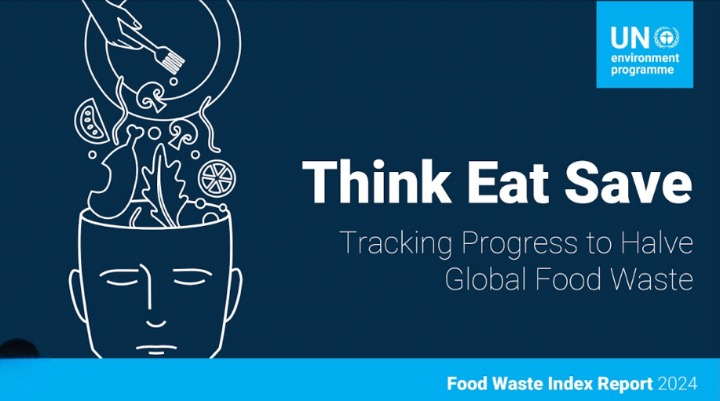
- 29 Mar 2024
Why is it in the News?
As per the Food Waste Index Report for 2024, households worldwide discarded more than one billion meals daily in 2022.
About UNEP Food Waste Index Report 2024:
- The United Nations Environment Programme (UNEP) Food Waste Index Report 2024, co-authored with the Waste and Resources Action Programme (WRAP), offers a comprehensive analysis of the state of global food waste.
- The report reveals alarming trends, including the wastage of over 1 billion meals per day in 2022, highlighting the urgency to address this critical issue.
Key findings from the report include:
- Per Capita Waste: The average annual food waste per person amounts to approximately 79 kilograms (or around 174 pounds).
- This equates to over a billion meals being wasted daily worldwide, underscoring the significant inefficiencies in current food consumption habits.
- Sources of Waste: Household waste constitutes the majority, around 60%, with food service establishments (such as restaurants) contributing approximately 28%, and retailers making up about 12%.
- This breakdown suggests that interventions targeting consumer behavior could have a substantial impact on reducing overall waste.
- Environmental Impact: Food loss and waste contribute to 8 to 10% of global greenhouse gas emissions.
- Comparatively, if food waste were considered a country, it would rank as the third-largest emitter of greenhouse gases globally, trailing only China and the United States.
- This stark comparison underscores the urgent need to address food waste not only for resource efficiency but also as a crucial aspect of climate action on a global scale.
- Global vs. Local Impact: The report highlights that food waste is a pervasive issue affecting both high-income and lower-income countries alike.
- This universality implies that solutions must be adaptable and scalable across various socioeconomic contexts.
- Collaborative Solutions: Governments, regional entities, industry stakeholders, and non-profit organizations are increasingly involved in public-private partnerships to combat food waste.
- Effective strategies, such as food redistribution through initiatives like food banks and charities, are recognized as vital for reducing waste while simultaneously supporting vulnerable communities.
Recommendations:
- The Food Waste Index Report by UNEP emphasizes the urgent need for comprehensive action, both globally and locally, to tackle the issue of food waste.
- By illuminating the extent and origins of waste, as well as its significant environmental and social repercussions, the report advocates for collaborative efforts across all sectors to establish sustainable food systems.
- The target of halving food waste by 2030 is not only in line with environmental goals but also represents a crucial step towards reducing global hunger and promoting a fairer distribution of food resources.
- As nations strive to achieve this objective, the report underscores the interconnectedness of food security, environmental sustainability, and economic viability.
- It presents addressing food waste not only as a moral and environmental imperative but also as a practical opportunity to bolster global food security and combat climate change.
Protection of Children from Sexual Offences (POCSO) Act

- 29 Mar 2024
Why is it in the News?
The Kerala High Court has held that a child charged with offenses under the Protection of Children from Sexual Offences (POCSO) Act, 2012, is to be prosecuted as per the provisions of the Juvenile Justice (Care and Protection of Children) (JJ) Act.
About the Protection of Children from Sexual Offences Act (POCSO Act):
- Enacted in 2012, the POCSO Act stands as India's pioneering legislation dedicated to addressing child sexual abuse comprehensively.
- Under the administration of the Ministry of Women and Child Development (MoWCD), its primary objective is safeguarding children under 18 from sexual assault, harassment, and exploitation, alongside establishing Special Courts to adjudicate such cases swiftly and efficiently, ensuring justice and protection for victims.
Salient Features of the Act:
- The POCSO Act adopts a gender-neutral approach, defining a child as "any person" under 18, ensuring inclusivity for all victims of child sexual abuse.
- It delineates various forms of sexual abuse, encompassing penetrative and non-penetrative assault, sexual harassment, and pornography.
- Certain circumstances, such as mental illness or abuse by a trusted individual like a family member, escalate the severity of sexual assault as per the Act.
- Individuals involved in trafficking children for sexual exploitation are subject to punishment under the Act's provisions on abetment.
- Attempting to commit an offense under the Act incurs penalties up to half the prescribed punishment for the completed offense.
- There's no time limit for reporting abuse, empowering victims to come forward at any point, regardless of when the abuse occurred.
- The Act mandates reporting of sexual abuse, penalizing failure to do so with imprisonment or fines.
- It includes child-friendly procedures for reporting, evidence recording, investigation, and trial, ensuring a supportive environment for victims.
- These procedures include recording the child's statement in a preferred location, preferably by a female officer, and avoiding aggressive questioning or character attacks.
- Medical examinations occur in the presence of a trusted individual, and the child is shielded from seeing the accused during testimony.
- Trials are held in camera, with the Special Court aiming to complete proceedings within a year of cognizance, prioritizing swift justice for victims.
Amendment to the Act:
- In 2019, the Act underwent its inaugural amendment to intensify penalties for particular offenses, aiming to dissuade perpetrators and safeguard the dignity of childhood.
- This amendment introduced the death penalty for aggravated penetrative sexual assault against children.
- Additionally, it empowered the imposition of fines and sentences of up to 20 years in prison to combat child pornography.
United Nations High Commissioner for Refugees (UNHCR)
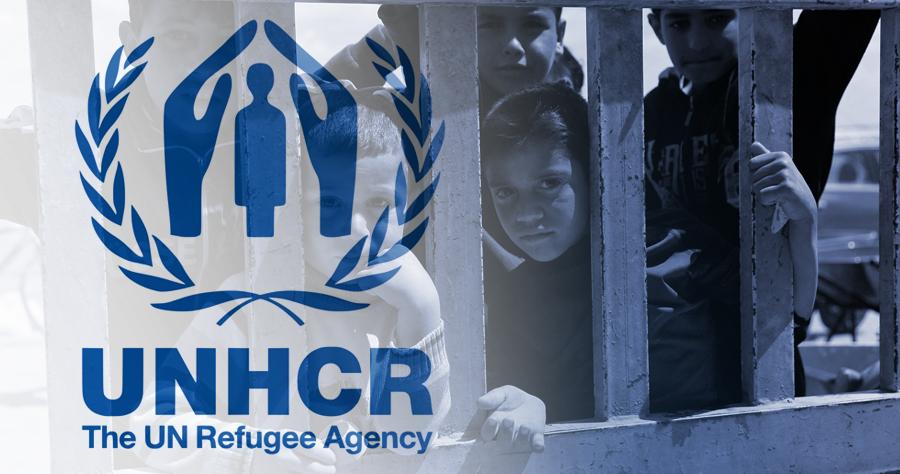
- 29 Mar 2024
Why is it in the News?
According to the United Nations High Commissioner for Refugees (UNHCR), in 2023, more than 4,500 Rohingya refugees embarked on a perilous journey across the Bay of Bengal and the Andaman Sea.
About the United Nations High Commissioner for Refugees (UNHCR):
- UNHCR, the UN Refugee Agency, is a global organization dedicated to saving lives, protecting rights, and building a better future for people forced to flee their homes because of conflict and persecution.
- It leads international action to protect refugees, forcibly displaced communities, and stateless people.
- Formally known as the Office of the High Commissioner for Refugees, UNHCR was established by the General Assembly of the United Nations in 1950 in the aftermath of the Second World War to help the millions of people who had lost their homes.
- Today, UNHCR operates in 137 countries and provides life-saving assistance, including shelter, food, water, and medical care for people forced to flee conflict and persecution, many of whom have nobody left to turn to.
- UNHCR defends their right to reach safety and helps them find a place to call home so they can rebuild their lives.
- UNHCR also collaborates with countries to improve and monitor refugee and asylum laws and policies, ensuring that human rights are upheld.
- UNHCR considers refugees and those forced to flee as partners, putting those most affected at the center of planning and decision-making.
Who are the Rohingya Refugees?
- Rohingya are an ethnic group, largely comprising Muslims, who predominantly live in the Western Myanmar province of Rakhine.
- They speak a dialect of Bengali, as opposed to the commonly spoken Burmese language.
- Though they have been living in the South East Asian country for generations, Myanmar considers them as persons who migrated to their land during Colonial rule so, it has not granted Rohingyas full citizenship.
- According to the 1982 Burmese citizenship law, a Rohingya (or any ethnic minority) is eligible for citizenship only if he/she provides proof that his/her ancestors have lived in the country before 1823. Otherwise, they are classified as “resident foreigners” or as “associate citizens” (even if one of the parent is a Myanmar citizen).
- Since they are not citizens, they are not entitled to be part of civil service. Their movements are also restricted within the Rakhine state.
T+0 Settlement Cycle

- 28 Mar 2024
Why is it in the News?
The BSE and NSE introduced trading in the T+0 rolling settlement cycle in the equity segment on an optional basis today.
What is Trade Settlement?
- Trade settlement encompasses the bilateral process of transferring funds and securities on the designated settlement date.
- It signifies the completion of a trade transaction when the purchased securities of a listed company are successfully delivered to the buyer, and the seller receives the agreed-upon payment.
- The evolution of the trade settlement cycle in India has seen notable adjustments over time.
- Initially shortened by SEBI to T+3 from T+5 in 2002 and further to T+2 in 2003, the current cycle in the Indian stock market stands at T+1.
- This migration to the T+1 cycle took effect in January 2023, positioning India as the second country globally, after China, to implement the T+1 settlement cycle for top-listed securities.
What is the T+0 Trading Settlement Cycle?
- In December last year, the capital markets regulator SEBI proposed to introduce a facility for clearing and settlement of funds and securities on T+0 (same day) on an optional basis, in addition to the existing T+1 settlement cycle.
- The regulator has also proposed to introduce optional instant settlement at a later stage.
- Under the T+0 trade cycle, the settlement of trades will happen on the same day after the closure of the T+0 market.
- If investors sell a share, they will get the money credited to their account the same day, and the buyer will also get the shares in their demat account on the very day of the transaction.
What are the Benefits of T+0 Trade Settlement?
- A shortened settlement cycle will bring cost and time efficiency, transparency in charges to investors, and strengthen risk management at clearing corporations and the overall securities market ecosystem.
- The T+0 trade cycle is expected to provide flexibility in terms of faster pay-out of the funds against the securities to the sellers and faster pay-out of securities against the funds to the buyers.
- It will allow better control over funds and securities by the investors.
- For the securities market ecosystem, a shorter settlement cycle will further free up capital in the securities market, thereby enhancing the overall market efficiency.
- It will enhance the overall risk management of Clearing Corporations (CCs) as the trades are backed by upfront funds and securities.
Who can Participate in the T+0 Settlement Cycle?
- All investors are eligible to participate in the segment for the T+0 trade settlement cycle if they are able to meet the timelines, process, and risk requirements as prescribed by the Market Infrastructure Institutions (MIIs).
Solar and Heliospheric Observatory (SOHO)

- 28 Mar 2024
Why is it in the News?
Recently, NASA's Soho mission, which is tasked with observing the Sun, has captured its 5000th comet as it dives around the star in our Solar System.
About Solar and Heliospheric Observatory (SOHO):
- SOHO was built as a general solar observatory, with twelve suites of scientific instruments to track all of these properties of the Sun.
- During its operations, it has provided important insights, including:
- Details about the interior of the Sun,
- What sunspots look like beneath the surface,
- Measurements of the speed of the solar wind,
- The charged particles that escape from the corona,
- Mapping the magnetic field behavior over the Sun’s surface; and
- Revealing new phenomena such as “solar tornadoes”.
- Built in Europe, SOHO is operated jointly by ESA and NASA, with contributions from a large number of scientists, engineers, and other staff around the world.
- The spacecraft was launched in 1995 with a planned two-year mission.
- Its work was successful enough to justify keeping the observatory going, and it’s still operating more than 20 years later.
- The probe orbits the Sun at a place where the gravity of the Sun and Earth balance each other out, known as the first Lagrange point (L1).
- Center for Astrophysics (CfA) scientists and engineers provided SOHO’s Ultraviolet Coronagraph Spectrometer (UVCS), which operated until 2013 and measured the ultraviolet spectrum of the hot solar atmosphere.
- UVCS provided the insight that the corona is too hot to be produced by ordinary thermal transfer, where particles collide and pass energy to each other.
- Instead, the corona and solar wind must be accelerated by the magnetic field interactions in some way.
- Other SOHO instruments measure the speed and composition of the solar wind; the seismic waves that travel across the Sun’s surface; the fluctuations in the temperature, composition, and density of different parts of the corona; and the motion of matter upward from the Sun’s interior to its surface.
South East Africa Montane Archipelago (SEAMA)
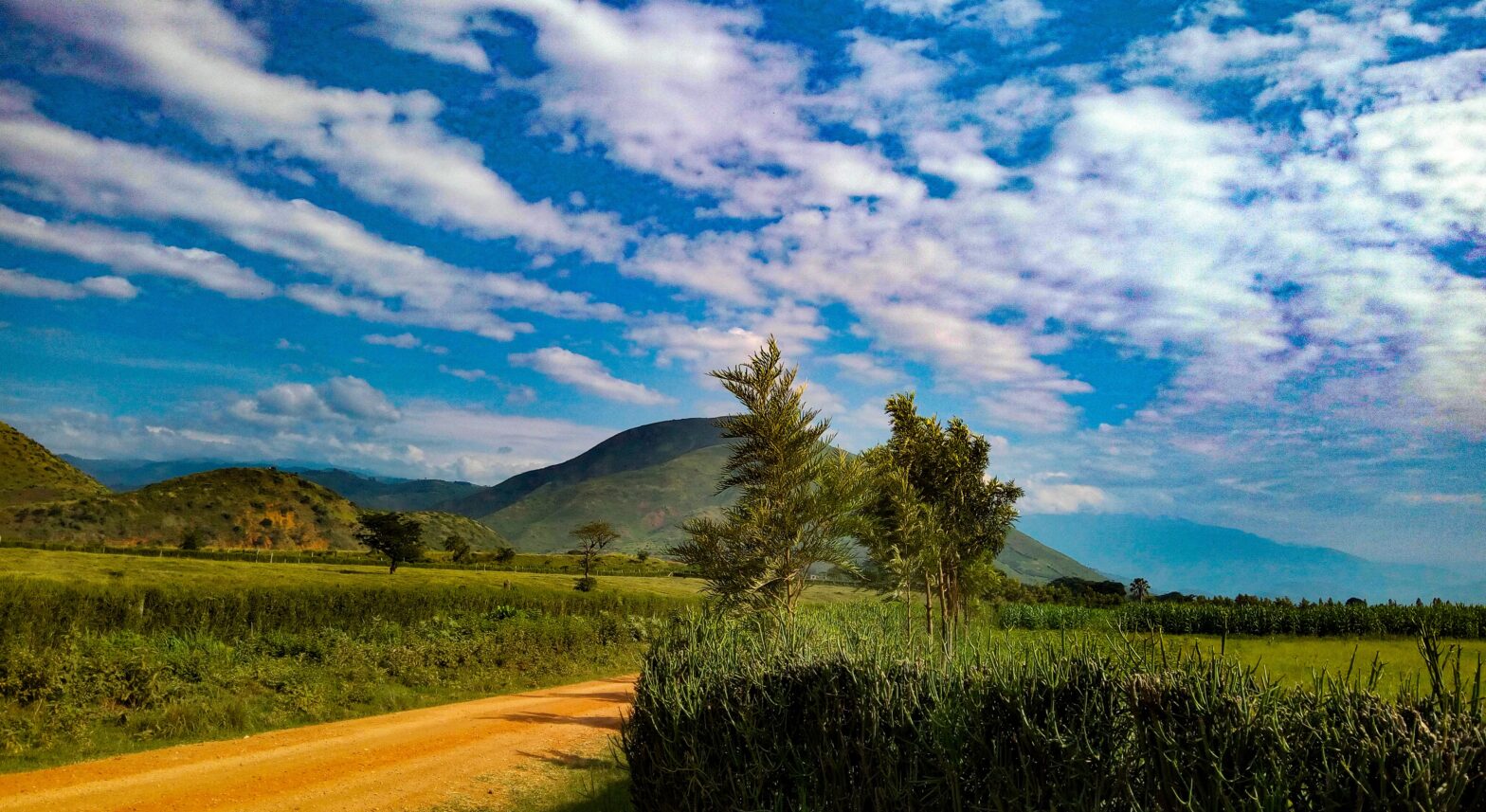
- 28 Mar 2024
Why is it in the News?
A recent investigation in southern Africa has revealed a plethora of previously undiscovered biodiversity within a newly identified ecoregion known as the South East Africa Montane Archipelago (SEAMA).
About South East Africa Montane Archipelago (SEAMA):
- It represents a newly identified mountainous ecoregion spanning from northern Mozambique to Mount Mulanje in Malawi, which is the second-highest peak in southern Africa.
- This ecoregion comprises 30 granitic inselbergs rising over 1000 meters above sea level, hosting both the largest (Mt Mabu) and smallest (Mt Lico) mid-elevation rainforests in southern Africa, alongside uniquely diverse montane grasslands.
- SEAMA experiences notably higher annual rainfall and humidity, particularly during the dry season, compared to its surrounding areas.
- Since 2000, SEAMA has witnessed a loss of 18% of its primary humid forest cover, with rates reaching up to 43% in certain locations—marking one of the most rapid deforestation rates across Africa.
- The principal cause of montane forest depletion in SEAMA stems from slash-and-burn agricultural practices, predominantly employed for subsistence food cultivation by local communities, alongside charcoal production for household cooking and economic purposes.
What are Inselbergs?
- Inselbergs are solitary geological formations characterized by isolated, steep-sided hills or small mountains rising abruptly from flat or gently sloping terrain.
- Composed of erosion-resistant rock, such as granite or quartzite, inselbergs stand out prominently in landscapes, with steep or even vertical sides resulting from differential erosion processes.
- These formations, found predominantly in arid or semi-arid regions, take various shapes, including dome-shaped hills, conical peaks, or sheer-sided cliffs.
- Despite their isolated nature, inselbergs support unique ecosystems and biodiversity, creating microclimates and habitats for specialized plant and animal species.
- Rock crevices, caves, and pockets of soil on inselbergs harbor distinct flora and fauna adapted to harsh conditions, making these formations biodiversity hotspots.
- Additionally, inselbergs often hold cultural and spiritual significance for indigenous peoples and local communities, serving as sites for religious rituals, cave paintings, or archaeological artifacts.
- However, inselbergs face threats such as deforestation and habitat degradation due to human activities like slash-and-burn agriculture and charcoal production.
- Conservation efforts are crucial to protect these geological wonders and preserve their ecological and cultural significance for future generations.
Carlsberg Ridge & Afanasy-Nikitin Seamount
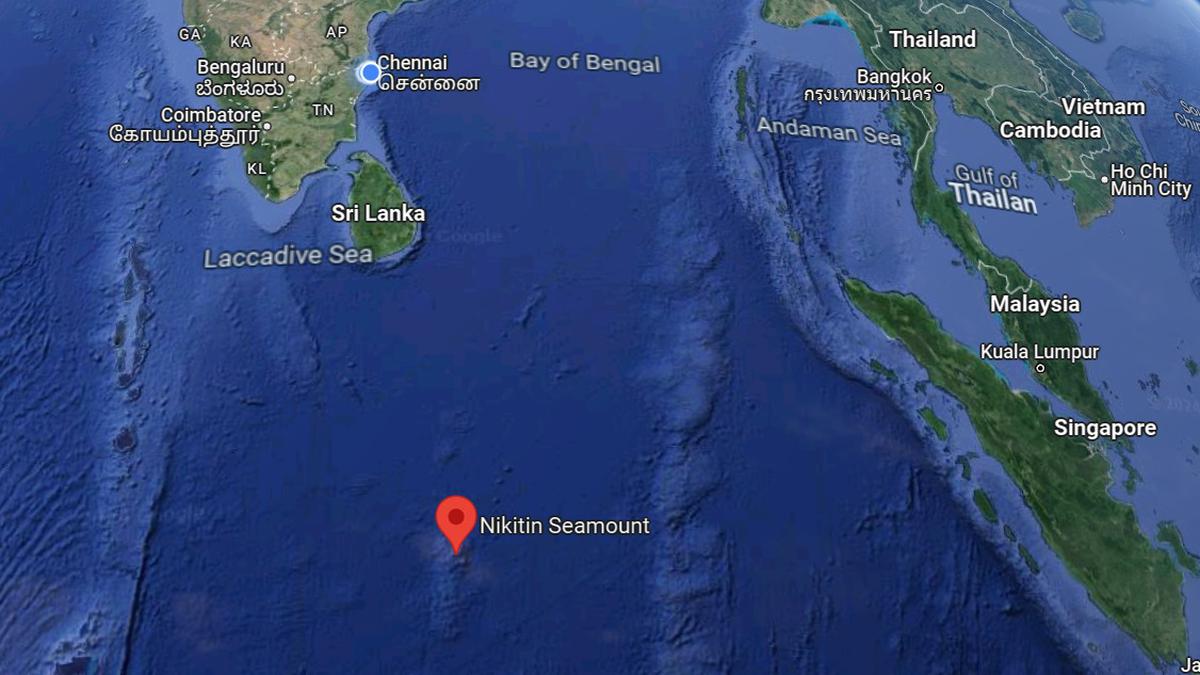
- 28 Mar 2024
Why is it in the News?
Indian delegates have been visiting the International Seabed Authority (ISA), Jamaica to strengthen efforts to explore two deep sea regions in the Indian Ocean for mining, according to reports this week.
What is the Carlsberg Ridge?
- The Carlsberg Ridge is the northern section of the Central Indian Ridge, a divergent tectonic plate boundary between the African Plate and the Indo-Australian Plate, traversing the western regions of the Indian Ocean.
- The ridge of which the Carlsberg Ridge is a part extends northward from a triple point junction near the island of Rodrigues (the Rodrigues Triple Point) to a junction with the Owen Fracture Zone.
- The ridge started its northwards propagation in the late Maastrichtian and reached the incipient Arabian Sea in the Eocene.
- Then it continued to accrete basalt but did not propagate for nearly 30 million years ago.
- Then, in the early Miocene, it started to propagate westwards towards the Afar hot spot, opening the Gulf of Aden.
- The Carlsberg Ridge is seismically active, with a major earthquake being recorded by the U.S. Geological Survey at 7.6 on the moment magnitude scale in July 2003.
- The ridge was discovered by the Danish research vessel Dana during the Carlsberg Foundation's Oceanographic Expedition around the world (1928–1930), better known as the 2nd Dana Expedition, and named after the Carlsberg Foundation, which funded the entire expedition and subsequent analysis and publication of results.
About the Afanasy Nikitin Seamount (ANS) Seabed:
- The ANS is a major structural feature in the Indian Ocean, rising up above the sea bed but below the surface, and forming a seamount.
- It is 400 km long and 150 km wide, and is located in the Central Indian Basin — southeast of Sri Lanka, right below the equator, to the west of Singapore.
- It was formed about 80 million years ago, while dinosaurs still roamed the Earth.
- The Seamount is named after Afanasy Nikitin, a 15th-century Russian merchant who was one of the first to document his travels to India.
- A black monolith is also erected in his honor at Revdanda, about 100 km away from Mumbai, where he is thought to have first set foot in the country.
- The ANS seamount is about 3,000 km from India’s coast and is rich in cobalt, copper, manganese, and nickel.
What are Seamounts?
- Seamounts are submarine mountains originating from volcanic eruptions beneath the ocean's surface, serving as critical habitats for diverse marine ecosystems.
- Similar to terrestrial volcanoes, seamounts can exhibit varying states of activity, including active, dormant, or extinct stages.
- They typically form near mid-ocean ridges, where tectonic plates separate, allowing magma to ascend and solidify on the seabed.
- Notably, seamounts also emerge near intraplate hotspots and oceanic island chains, such as island arcs, characterized by volcanic and seismic activity.
- These underwater formations hold significant scientific value, offering insights into mantle composition, plate tectonics, and oceanic circulation dynamics.
- Moreover, seamounts play a crucial role in nutrient cycling and marine life proliferation, fostering localized upwelling of nutrient-rich waters that support diverse biological communities.
Australia’s Carbon Credits System

- 28 Mar 2024
Why is it in the News?
A recent study revealed that a prominent reforestation initiative operating within the Australian Carbon Credit Unit (ACCU) Scheme has been deemed a significant underperformer, amounting to a 'catastrophe' in terms of its outcomes.
What is the Australian Carbon Credit Unit (ACCU) Scheme?
- The ACCU Scheme plays a pivotal role in the Australian carbon market, incentivizing various entities including individuals, businesses, and governmental bodies to engage in endeavors aimed at mitigating emissions or sequestering carbon.
- Participants encompass a broad spectrum ranging from individuals and sole traders to corporations, local and state government entities, and trusts.
- Achievement of the scheme's objectives is facilitated through diverse means such as the adoption of innovative technologies, equipment upgrades, the adoption of sustainable business practices to enhance productivity or energy efficiency, and the implementation of novel vegetation management techniques.
How Does It Work?
- The ACCU Scheme operates by rewarding participants who execute projects focused on either reducing or avoiding greenhouse gas emissions (emissions avoidance) or capturing and storing atmospheric carbon (sequestration).
- These projects contribute significantly to mitigating climate change and advancing environmental sustainability in Australia.
- For each tonne of carbon dioxide equivalent (t CO?-e) emissions that a participant's project successfully stores or avoids, they are eligible to earn one Australian Carbon Credit Unit (ACCU).
- These ACCUs serve as a tangible representation of the project's positive environmental impact and can be traded on the secondary market or sold to the Australian Government through carbon abatement contracts.
- In essence, the ACCU Scheme establishes a robust framework for quantifying and monetizing emission reduction and carbon sequestration efforts, providing a strong financial incentive for individuals and businesses to actively engage in climate-friendly initiatives.
- By fostering an active carbon market, the scheme helps ensure the continued growth and development of innovative projects that combat climate change and support Australia's transition to a low-carbon economy.
Criticisms and Controversies:
- The ACCU Scheme has encountered criticisms and controversies regarding its overall effectiveness and the integrity of the carbon credits it generates.
- One such concern is based on research indicating that native forests in Australia's desert regions are experiencing either stagnant growth or shrinking woodlands.
- This finding raises questions about the capacity of these areas to sequester carbon at the levels claimed in ACCU projects.
- Furthermore, critics argue that Australia has amassed substantial quantities of carbon credits through these projects, despite the questionable integrity of the underlying data.
- The scheme's reliability and effectiveness are, thus, scrutinized, as the quality and accuracy of the carbon credits generated are essential to maintaining trust and credibility in the carbon market.
- As the ACCU Scheme evolves, addressing these concerns and ensuring that it genuinely contributes to emission reduction and carbon sequestration efforts is crucial.
- Regular evaluations and transparency in data collection and analysis will help enhance public confidence and secure the scheme's role as a central pillar of Australia's climate change mitigation strategy.
Krishi Integrated Command and Control Centre (ICCC)
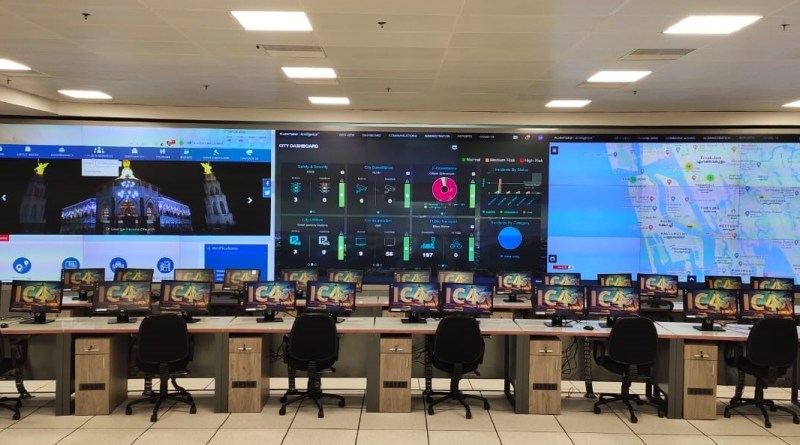
- 27 Mar 2024
Why is it in the News?
Earlier this month, Agriculture Minister Arjun Munda inaugurated a Krishi Integrated Command and Control Centre (ICCC) set up at Krishi Bhavan in New Delhi, a big-screen dashboard of all digital innovations in the sector.
What is the Krishi ICCC?
- The ICCC is a tech-based solution involving multiple IT applications and platforms, designed to help make informed decisions.
- The center is housed in the Ministry of Agriculture & Farmers’ Welfare and is responsible for legislation, policy formation, and implementation of initiatives in the agriculture sector.
- The ICCC uses state-of-the-art technologies such as artificial intelligence, remote sensing, and Geographic Information Systems (GIS) to collect and process large amounts of granular data.
- The ICCC uses platforms including the Krishi Decision Support System (DSS) to collect micro-level data, process it, and present the macro picture.
How does the Krishi ICCC Operate?
- Using AI and machine learning, the system will initially identify a farmer either through their mobile number or Aadhaar details.
- Next, it will cross-reference this information with the farmer's field data retrieved from land records, as well as historical crop sowing data from the crop registry, and weather information from IMD, among other sources.
- Subsequently, the system will generate personalized advisories tailored to the farmer's needs, presented in their local language.
- This functionality will be facilitated through the Bhashini platform, enabling translations into multiple Indian languages.
What Information Does the Krishi ICCC Offer?
- Displayed on eight expansive 55-inch LED screens within the ICCC, the system provides comprehensive data covering various aspects such as temperatures, rainfall, wind speed, crop yields, production statistics, drought conditions, cropping patterns (both geographically and over time), and production forecasts.
- This information is presented in a graphical, map-based, timeline, and drill-down formats for enhanced visualization and analysis.
- Additionally, users can access pertinent trends, including periodic and non-periodic variations, outliers, and Key Performance Indicators (KPIs), alongside receiving insights, alerts, and feedback concerning agriculture schemes, programs, projects, and initiatives.
- Moreover, the system facilitates direct interaction between farmer beneficiaries and officials or the Minister through video conferencing facilities, ensuring effective communication and support.
Practical Applications:
- Farmer’s Advisory: The ICCC allows visualization of GIS-based soil carbon mapping as well as soil health card data for a particular district together in one place.
- This, when visualized with weather-related data from IMD for the selected district, will allow a customized and authentic advisory to be sent to the farmer about the type of crops that can be grown, and water and fertilizer requirements.
- Drought Actions: An increase or decrease in yield from a specific region (as per GCES data) can be correlated with weather, rainfall, and other information visualized through the Drought Portal, enabling the administration to understand the reason for the increase/ decrease in yield and to take decisions proactively.
- Crop Diversification: An analysis of crop diversification maps, together with field variability for paddy, will enable decision-makers to identify regions with scope for diversified cropping so that farmers can be advised accordingly.
- Farm Data Depository: Krishi Decision Support System (K-DSS), a platform under development, will act as an agriculture data repository. Integrated spatial and non-spatial data will be superimposed as a layer on the GIS map, and various AI/ ML models will be run on the data.
- The K-DSS will help in evidence-based, efficient, and data-driven decision-making, and assist in preparing customized advisories for farmers.
- Validation of Yield: Yield, as captured through Krishi MApper, can be analyzed with the yield generated through GCES application for a plot.
Archaeological Survey of India will ‘Delist’ Some ‘Lost’ Monuments
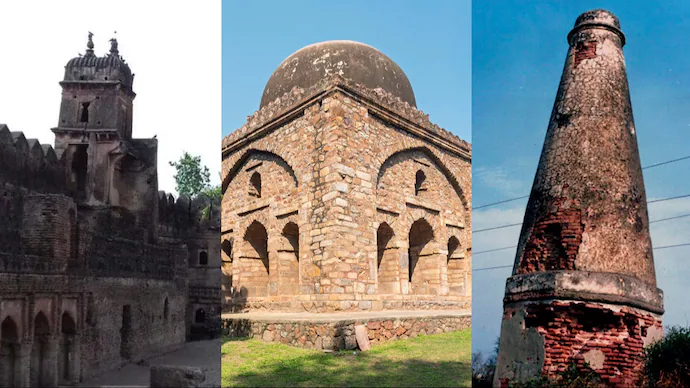
- 27 Mar 2024
Why is it in the News?
The Archaeological Survey of India (ASI) has decided to delist 18 “centrally protected monuments” because it has assessed that they do not have national importance.
Context:
- ASI has decided to delist 18 protected monuments
- ASI says the monuments have ceased to be of 'national importance'
- The 18 'lost' monuments include eleven in Uttar Pradesh
Significance of Delisting Monuments:
- Several monuments are currently facing the prospect of delisting, including historical landmarks such as a medieval highway milestone in Mujessar village, Barakhamba Cemetery in Delhi, Gunner Burkill’s tomb in Jhansi district, a cemetery at Gaughat in Lucknow, and Telia Nala Buddhist ruins in Varanasi.
- The exact whereabouts or condition of these monuments remain uncertain.
Meaning of Delisting:
- Delisting a monument entails its removal from the roster of protected sites, thereby relinquishing its conservation, protection, and maintenance responsibilities by the Archaeological Survey of India (ASI).
- Under the Ancient Monuments and Archaeological Sites and Remains (AMASR) Act, delisted monuments no longer enjoy protection against construction-related activities in their vicinity, enabling regular urbanization and development activities to proceed uninhibited.
Status of Protected Monuments:
- The inventory of protected monuments is subject to change through additions and removals. Presently, the ASI oversees 3,693 monuments, a number set to decrease to 3,675 following the ongoing delisting initiative.
- This marks the first extensive delisting endeavor in several decades.
Procedures for Monument Delisting:
- The regulations governing the List of Protected Monuments are stipulated under the Ancient Monuments and Archaeological Sites and Remains Rules, 1959.
- This legislation safeguards structures and sites aged over a century, encompassing a diverse array of architectural and historical marvels.
- The government possesses the authority to eliminate certain monuments from the protected list via official notification in the Gazette.
- Through such notifications, the government can declare that certain ancient monuments, archaeological sites, or relics no longer hold national significance under the purview of the AMASR Act (Section 35 of the AMASR Act).
Lost Monuments:
- The Ancient Monuments and Archaeological Sites and Remains (AMASR) Act safeguards monuments and sites aged over a century.
- Nevertheless, numerous structures, particularly smaller or lesser-known ones, have gradually disappeared over time due to factors like urbanization, encroachments, dam and reservoir construction, or neglect.
- In some instances, the lack of public memory hampers efforts to locate these monuments.
Extent of Loss:
- According to a submission by the Ministry of Culture to the Parliamentary Standing Committee on Transport, Tourism, and Culture in December 2022, 50 out of India's 3,693 centrally protected monuments were unaccounted for.
- Among these, 14 succumbed to rapid urbanization, 12 were submerged by reservoirs or dams, and the remaining 24 remain untraceable.
- The Committee noted that budget constraints limited the provision of security guards to historical sites, with only 2,578 guards assigned to 248 sites out of the required 7,000.
- Additionally, a 2013 report by the Comptroller and Auditor General (CAG) of India highlighted the disappearance of at least 92 centrally protected monuments nationwide.
About the Archaeological Survey of India (ASI):
- Founded in 1861 by Alexander Cunningham, the Archaeological Survey of India (ASI) was later formalized as a statutory body under the Ancient Monuments and Archaeological Sites and Remains Act, 1958 (AMASR Act) following India's independence.
- ASI's primary mandate encompasses archaeological research and the safeguarding, conservation, and preservation of cultural monuments across the nation.
- Its operational scope includes conducting surveys of antiquarian remains, exploring and excavating archaeological sites, and overseeing the conservation and maintenance of protected monuments, among other responsibilities.
- The ASI operates under the purview of the Ministry of Culture.
Armed Forces (Special Powers) Act (AFSPA)
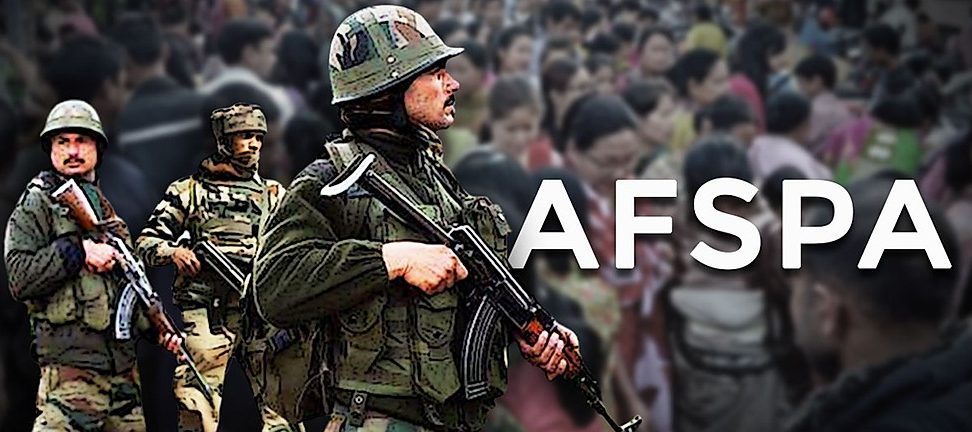
- 27 Mar 2024
Why is it in the News?
Union Home Minister Amit Shah has said the Jammu and Kashmir Assembly elections will be held before September and that the Centre will consider revoking the Armed Forces (Special Powers) Act there.
What is AFSPA?
- The AFSPA empowers the armed forces to uphold law and order in “disturbed areas.”
- They have the right to prevent a gathering of five or more people in a given location, use force, or even open fire after providing a sufficient warning if they believe someone is breaking the law.
- Armed forces are also permitted to enter and search any location if they suspect illegal activity.
- According to the AFSPA Act, the Army also has the authority to detain someone without a warrant, seize weapons and ammunition, and offer protection to someone acting in good faith.
Salient features of the AFSPA Act:
- The Central Government or the Governor of a State has the right to declare all or a part of any state to be a disturbed region if they believe it is necessary to stop the terrorist activity or any other activity that could jeopardize India’s sovereignty or be disrespectful to the national anthem, flag, or constitution.
- According to Section 3 of the AFSPA, the Central Government may send out armed forces to support the civilian authorities if the governor of a state publishes a formal announcement in the Gazette of India.
- According to the Disturbed Areas Act of 1976, a territory must maintain the status quo for a minimum of three months after being designated “disturbed.”
- Section (4) of the AFSPA grants army officers specific authority to shoot the only requirement is that the officer must sound the alarm before firing.
- Security forces have the authority to search without permission and arrest anyone without a warrant.
- After being taken into custody, a person must be delivered to the closest police station as soon as possible.
- The Central Government must first provide its consent before prosecuting an on-duty officer for alleged human rights violations.
What are the “Disturbed areas” under the AFSPA Act?
- The state governor, the administrator of the union territory, or the central government may declare a region as a “disturbed area” by publishing a notice in the official gazette, the entire territory or an order to implement it may be declared disturbed.
- It is up to the state governments to decide whether or not to implement the Act.
- However, the governor or the Center may disregard their judgment under Section (3) of the Act.
- The state governor was the only person with the authority to confer AFSPA when the act came into force in 1958.
- The 1978 amendment granted the central government this authority.
List of states that implement the AFSPA Act:
- Four states and one union territory currently have AFPSA activities, while 12 districts are still partially subject to the act, and 31 districts have fully implemented the law.
The AFSPA states include:
-
- Jammu & Kashmir
- Nagaland
- Assam
- Arunachal Pradesh
- Manipur
Black Carbon
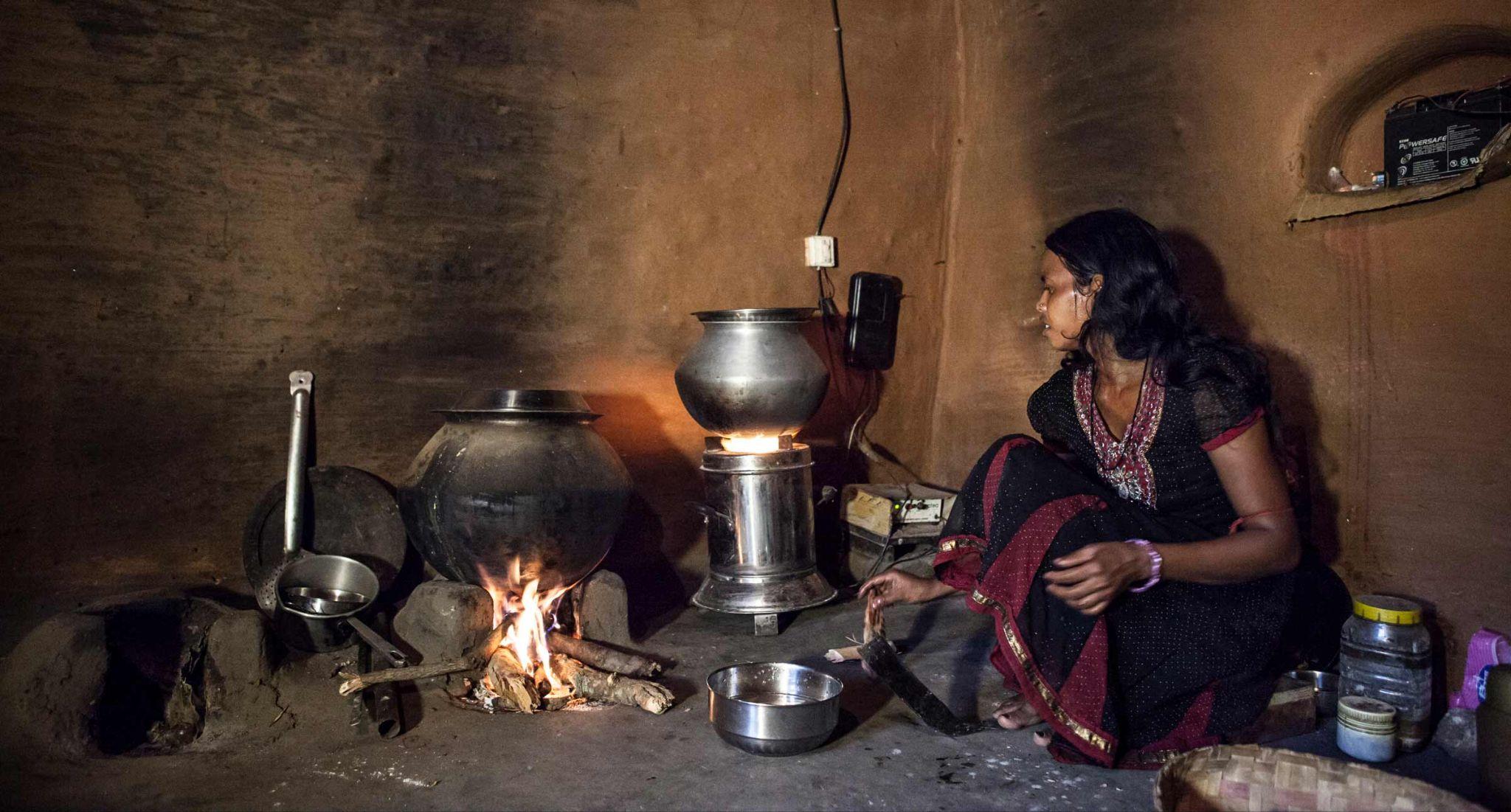
- 27 Mar 2024
Why is it in the News?
As per a study, the residential sector is responsible for 47% of India's overall black carbon emissions.
What is Black Carbon?
- Black carbon is the dark, sooty material emitted alongside other pollutants when biomass and fossil fuels are not fully combusted.
- It contributes to global warming and poses severe risks.
- Studies have found a direct link between exposure to black carbon and a higher risk of heart disease, birth complications, and premature death.
- Most black carbon emissions in India arise from burning biomass, such as cow dung or straw, in traditional cookstoves.
- According to a 2016 study, the residential sector contributes 47% of India’s total black carbon emissions.
- Industries contribute a further 22%, diesel vehicles 17%, open burning 12%, and other sources 2%.
- Decarbonization efforts in the industry and transport sectors in the past decade have yielded reductions in black carbon emissions, but the residential sector remains a challenge.
- Black carbon is a potent contributor to global warming due to its efficient absorption of light and subsequent heating of its surroundings.
- This process leads to the conversion of incoming solar radiation into heat.
- Moreover, black carbon influences cloud formation and affects regional circulation and precipitation patterns.
- When deposited on ice and snow, it diminishes surface albedo, reducing their ability to reflect sunlight and causing surface warming.
Impacts:
- Black carbon significantly contributes to global warming and poses substantial risks to human health.
- Exposure to black carbon has been linked to increased incidences of heart disease, birth complications, and premature mortality.
- Its warming effect on climate is estimated to be 460-1,500 times more potent than that of CO2.
Magnetofossils
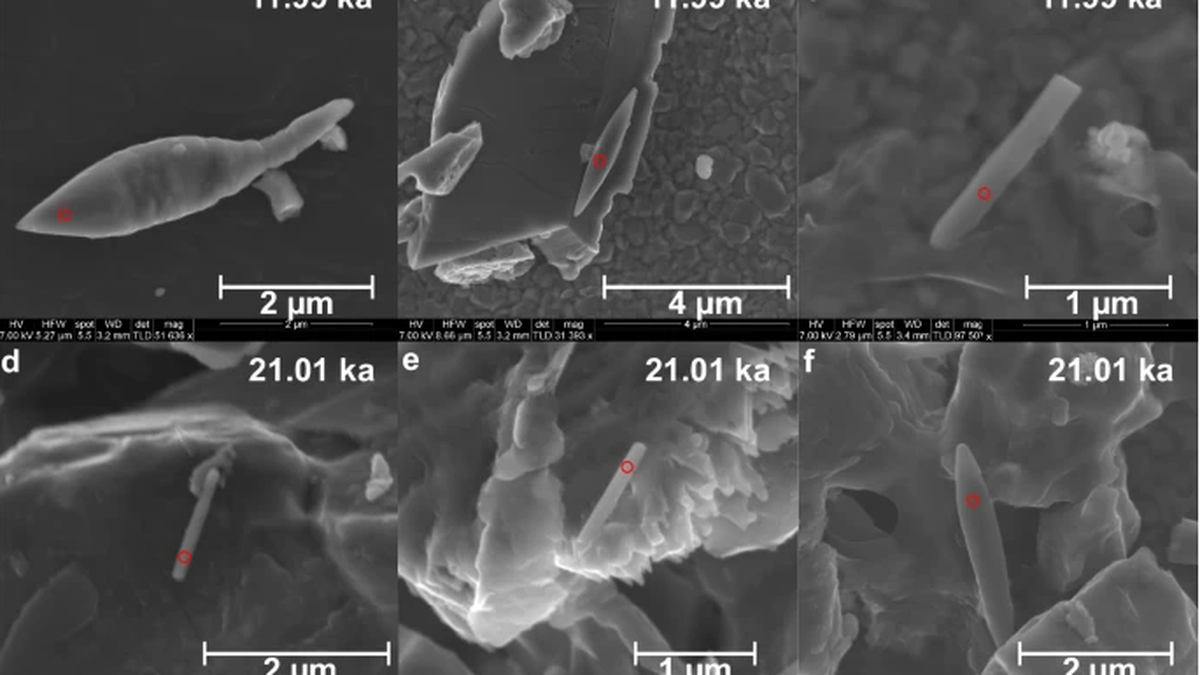
- 27 Mar 2024
Why is it in the News?
In the depths of the Bay of Bengal, scientists have discovered a 50,000-year-old sediment — a giant magnetofossil and one of the youngest to be found yet.
What are Magnetofossils?
- Magnetofossils represent the fossilized remnants of magnetic particles originated by magnetotactic bacteria, also referred to as magnetobacteria, encapsulated within the geological archives.
About Magnetotactic Bacteria:
- Magnetotactic bacteria, predominantly prokaryotic microorganisms, possess the unique ability to align themselves in alignment with Earth's magnetic field.
- These organisms were traditionally believed to utilize the Earth's magnetic field as a navigational aid to locate environments with optimal oxygen levels.
- Comprising distinctively structured particles abundant in iron, these bacteria harbor small sacs that function akin to a compass.
- Magnetotactic bacteria synthesize minute crystals composed of iron-rich minerals such as magnetite or greigite, facilitating their navigation amidst fluctuations in oxygen concentrations within their aquatic habitats.
Key Findings of the Study:
- Sediment Composition: The sediment core, measuring three meters in length and extracted from the southwestern Bay of Bengal, primarily comprised "pale green silty clays."
- Foraminifera Abundance: Researchers observed abundant benthic and planktic foraminifera, which are single-celled organisms characterized by shells found near the seabed and freely floating in water.
- Oxygen Concentration: At depths ranging from approximately 1,000 to 1,500 meters, the Bay of Bengal exhibited notably low oxygen levels.
- Analysis of the sediment sample confirmed fluctuations in monsoon activity, as evidenced by the presence of magnetic mineral particles from distinct geological periods.
- Role of Rivers: Rivers such as the Godavari, Mahanadi, Ganga-Brahmaputra, Cauvery, and Penner, which discharge into the Bay of Bengal, played a pivotal role in magnetofossil formation.
- Nutrient Supply: The nutrient-rich sediment transported by these rivers supplied reactive iron, which, combined with organic carbon in the suboxic conditions of the Bay of Bengal, created a conducive environment for magnetotactic bacteria growth.
- Impact of Oceanographic Processes: Factors such as freshwater discharge from rivers and oceanographic phenomena like eddy formation influenced the oxygen content in these waters, distinguishing them from other low-oxygen zones.
- Persistence of Suboxic Conditions: The presence of magnetofossils indicated the prolonged persistence of suboxic conditions in the Bay of Bengal, fostering an environment conducive to the proliferation of magnetotactic bacteria.
Ola’s ‘Krutrim AI’

- 26 Mar 2024
Why is it in the News?
Earlier this year, Ola, the Indian multinational ridesharing company, introduced Krutrim AI as "India's own AI," with plans for substantial enhancements to its initial iteration to expand its foundation upon launch.
What is Krutrim AI?
- Krutrim AI is a generative AI assistant that converses in 10+ languages, including Hindi, English, Tamil, Telugu, Malayalam, Bengali, Marathi, Kannada, Gujarati, etc., making it India’s own AI by an artificial intelligence startup.
- It was founded by Bhavish Aggarwal, the founder of Ola Cabs.
- Krutrim AI has been natively created to ensure a creative AI tool designed for over 1.4 billion Indians to provide 100% contextually relevant responses.
- It is a critical milestone in developing public-facing artificial intelligence in India.
These are 4 benefits of Krutrim AI:
-
- Supports multiple Indian languages.
- Native experience is built to cater to cultural diversity.
- They are trained on local language tokens and sources.
- Allows user interaction without charge on its free version.
What is the Tech Behind Krutrim AI?
- Krutrim AI uses Natural Language Processing (NLP) — a component of AI — to understand the nuances of human language, including colloquialisms and cultural contexts.
- Machine Learning (ML) algorithms enable it to learn from vast data sets and improve its responses over time.
- Moreover, Deep Learning, a sophisticated branch of ML, helps it recognize patterns and analyze complex data, which could be crucial for Krutrim AI’s performance.
- While the exact technologies used are not disclosed, these methodologies align with the AI’s demonstrated functions.
How Krutrim AI Works?
- Krutrim AI works through prompts given in the chat field, similar to other generative AI chatbots.
- Generative AI chatbots like Krutrim AI are large language models that understand prompts in the language used for daily communication and respond with language similar to humans.
- Krutrim AI allows users to reply, modify the details, or add additional elements to the response, similar to the experience a user would have with a human assistant.
Benefits of Using Krutrim AI:
- Krutrim AI offers 4 benefits.
- Multilingual as it responds in over 10 Indian languages, which is helpful for users not proficient in English.
- Cultural context provides a native experience, as Krutrim’s training data was specifically geared towards being culturally relevant and understanding the Indian context.
- The development of (AI) start-up Krutrim was done natively from the ground up.
- It is trained on over 2 trillion language tokens, with the largest representation of Indian languages in the artificial intelligence landscape.
- Krutrim’s base model offers a free AI chatbot experience, with a premium version (Krutrim Pro) in the works, that will have larger knowledge-based capabilities.
Post-Vaccination Immunity
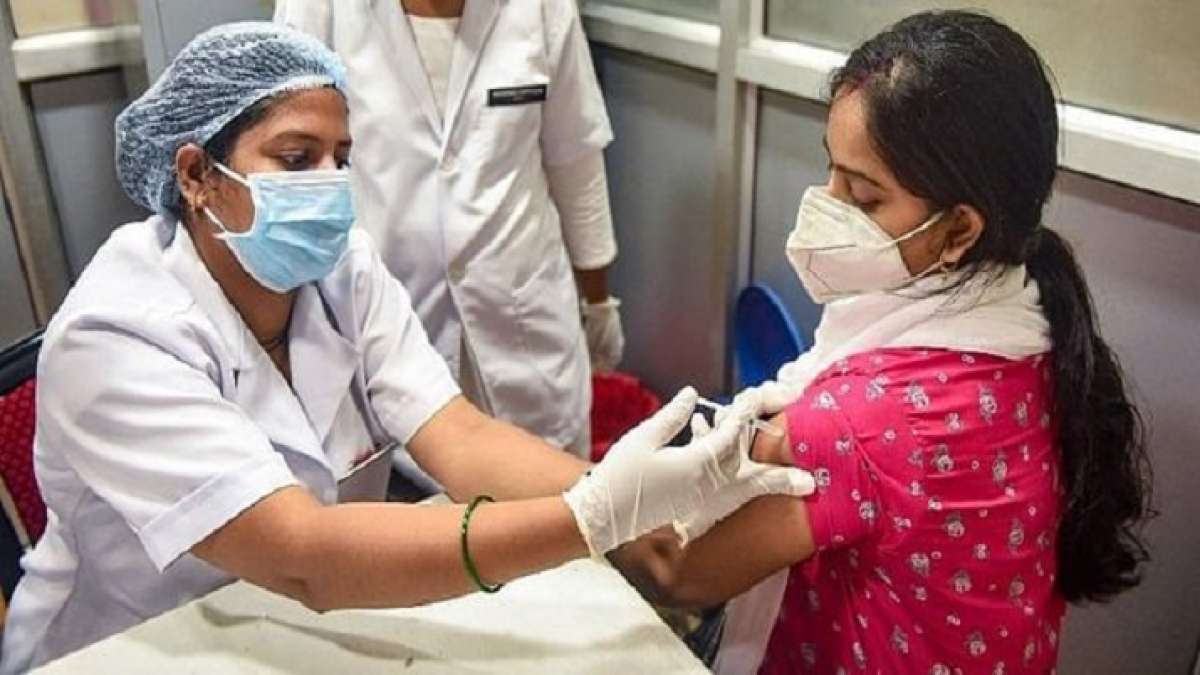
- 26 Mar 2024
Why is it in the News?
A recent review revealed that only a handful of vaccines offer durable protection lasting beyond 20 years.
About Post-vaccination immunity:
Mechanism:
- The fundamental immunological process involves the production of memory B cells in lymph nodes, providing long-term protection against diseases.
- These memory B cells recognize antigens delivered by vaccines, prompting the production of potent antibodies upon encountering similar antigens from foreign objects like viruses, effectively eliminating infections.
- T cell support is essential for the activation of memory B cells, thus vaccines stimulating T cells are capable of inducing their production.
- Notably, certain vaccines, such as polysaccharide typhoid and pneumococcal vaccines, may not prompt the production of B cells.
- To extend the duration of immunity conferred by memory B cells, frequent boosters may be necessary, ranging from six months to several years.
- However, the presence of memory B cells alone does not guarantee protection, as the effectiveness of vaccines in triggering their production varies.
- Long-lasting plasma cells (LLPCs) migrate from lymph nodes to the bone marrow, where they may persist for decades, constituting a crucial aspect of vaccine-induced immunity.
- Every vaccine aims to generate LLPCs in the bone marrow for lifelong protection, with vaccines like those for measles and rubella known to stimulate LLPC production.
- Notably, some potent vaccines, such as mRNA COVID-19 shots, may not effectively activate LLPCs in the bone marrow.
- For vaccines to confer long-term protection, they must generate both memory B cells and LLPCs in the bone marrow, with variations in vaccine effectiveness in producing these cells explaining differences in their durability.
Smart Meter National Programme (SMNP)

- 26 Mar 2024
Why is it in the News?
Kerala's shift towards an alternative approach for the implementation of smart electricity meters, sidelining the Central government's Rs 3 lakh crore project, poses a challenge to the Union Government's initiative of replacing 250 million traditional meters with smart meters in all households by March 2025.
About the Smart Meter National Programme (SMNP):
- The Indian government has initiated the Smart Meter National Programme (SMNP) to revolutionize the country's energy sector through the implementation of smart meters.
- By replacing 25 crore conventional meters, the SMNP aims to enhance the operational efficiency and revenue management of distribution companies (DISCOMs).
- Under the leadership of Energy Efficiency Services Limited (EESL), a joint venture of four National Public Sector Enterprises, the scheme is set to make waves in the energy sector.
- EESL, comprised of NTPC Limited, PFC, REC, and POWERGRID, operates under the Ministry of Power and is committed to undertaking the necessary capital and operational expenditures with zero upfront investment from states and utilities.
- The Build-Own-Operate-Transfer (BOOT) model facilitates the recovery of smart meter costs via the monetization of energy savings resulting from improved billing accuracy, reduced meter reading costs, and increased efficiency.
- In accordance with guidelines set forth by the Central Electricity Authority (CEA), the strategic deployment of these smart meters adheres to industry standards.
Smart meters offer a multitude of advantages:
-
- Consumers can monitor their electricity usage and make informed decisions to reduce their bills.
- Utilities benefit from enhanced operational efficiency, enabling better power demand management.
- Web-based Monitoring: The interconnected smart meter network can mitigate utilities' commercial losses, enhance revenue generation, and propel power sector reforms.
- The Smart Meter National Programme (SMNP) paves the way for a more efficient and sustainable energy landscape in India, revolutionizing the way utilities operate and consumers engage with their electricity usage.
What are Smart Meters?
- A smart meter serves as an advanced tool for recording electricity consumption and voltage levels, offering a significant upgrade over traditional metering systems.
- While conventional meters simply measure power usage, smart meters take it a step further by transmitting real-time data to utility providers at intervals of 15 minutes or hourly.
- Smart meters truly live up to their name by utilizing internet connectivity to facilitate two-way communication.
- On one hand, they empower consumers with up-to-date information on energy usage patterns, enabling them to make informed decisions and manage consumption more efficiently.
- On the other hand, utility providers gain valuable insights for monitoring purposes and ensuring accurate billing.
- In essence, smart meters pave the way for improved energy management, increased transparency, and enhanced efficiency, catering to the evolving needs of both consumers and utility providers in today's digital era.
Cannabis
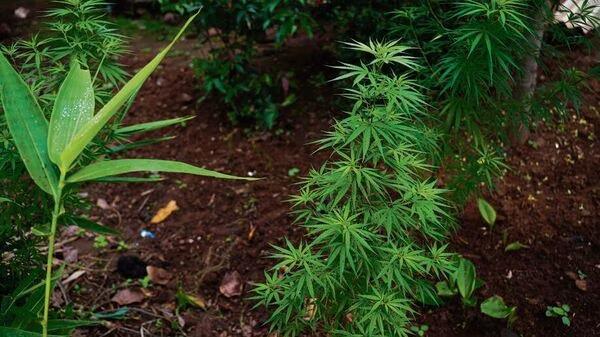
- 26 Mar 2024
Why is it in the News?
During the celebration of Holi across India, Bhang, derived from the Cannabis sativa plant or true hemp, is widely favored for consumption.
What is Cannabis?
- Cannabis is found mainly in the Indo-Gangetic plains – in Himachal Pradesh, Punjab, Haryana, Uttar Pradesh, Bihar, and West Bengal – along with the Deccan region.
- Cannabis is termed Ganzai in Telugu, Ganja in Tamil, and Bangi in Kannada.
- The cannabis plant can be 4 to 10 feet tall at maturity.
- Its plant also grows on wastelands and can easily be spotted on roadsides.
- Three products can be obtained from the plant – fiber, oil, and narcotics.
- Bhang is obtained from the seeds and leaves of the plant, which are reduced to powder.
- Then, the powder is filtered and prepared for drinking, mixed often with cold, flavored milk or thandai on Holi.
Additional Uses and Benefits of Cannabis:
- According to the Indian Council of Agricultural Research (ICAR), cannabis ash can be applied to animals' skin in cases of hematoma, a condition characterized by blood clotting outside of blood vessels.
- Hemp-seed oil is employed in varnish industries as a substitute for linseed oil and in soft soap manufacturing, as well as possessing numerous medicinal properties.
- In Himachal Pradesh, cannabis cultivation is concentrated in Chhota/Bada Bhangal of Kangra and the Karsog area of Mandi district.
- While cultivating cannabis for addictive narcotics is illegal, states permit regulated cultivation for industrial or horticultural purposes, focusing on fiber and seed extraction.
- Cannabis-based treatments, such as bhang application on paddy seeds, can enhance germination and control threadworms in paddy nurseries, particularly in the temperate regions of Jammu and Kashmir.
- Heated and crushed cannabis leaves are often transformed into a paste to alleviate pain from a honey bee or wasp stings.
District Election Management Plan
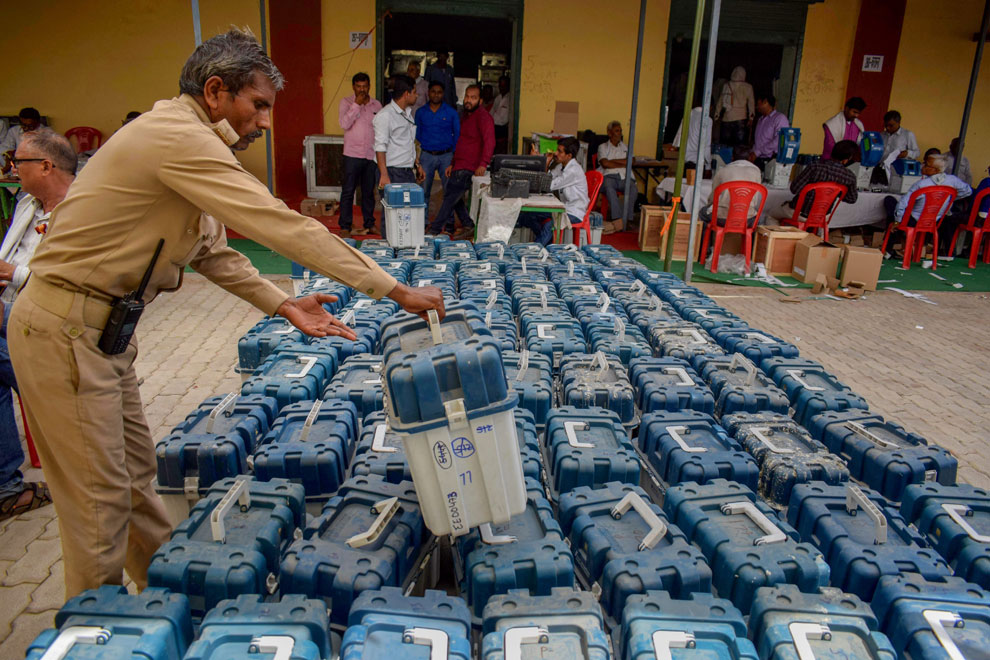
- 26 Mar 2024
Why is it in the News?
Effective execution of elections demands thorough planning, where a crucial aspect is the meticulous formulation and implementation of the District Election Management Plan (DEMP).
About the District Election Management Plan (DEMP):
- The District Election Management Plan (DEMP) is a comprehensive document designed to ensure the smooth conduct of elections, employing statistics and analysis.
- According to the Election Commission of India, the DEMP must be prepared at least six months before the tentative poll day.
- Collaboration among election officials, administrative authorities, law enforcement agencies, etc., is crucial for the execution of the DEMP.
Key components of the DEMP include:
- District Profile: A district profile providing foundational electoral strategy, featuring political maps outlining constituencies, key demographic and infrastructure statistics, and a brief on the district’s administrative setup and socio-economic features.
- Polling Stations: Detailed strategies for enhancing the availability and accessibility of polling stations, ensuring essential facilities such as ramps, electricity, lighting, drinking water, toilets, and internet connectivity.
- Special Attention to PwD and Senior Citizens: Addressing the requirements of voters with disabilities and senior citizens through dedicated help desks, round-the-clock control rooms, home voting options, and advanced postal ballot voting for essential service personnel.
- Systematic Voters’ Education and Electoral Participation (SVEEP) Plan: Integration of the Systematic Voters’ Education and Electoral Participation (SVEEP) plan, focused on increasing electoral participation.
-
- Planning, training, welfare, and deployment strategies for election personnel, along with training initiatives for district-level teams to enforce the Model Code of Conduct (MCC) and equip all election personnel with the necessary skills and knowledge.
Regarding Electronic Voting Machines (EVMs)?
- Management of Electronic Voting Machines (EVMs) is vital to uphold the integrity of the electoral process, encompassing strategies for secure storage, availability, transportation, and maintenance of both EVMs and Voter Verifiable Paper Audit Trails (VVPATs).
- The District Election Management Plan (DEMP) contributes to enhancing the voting process by ensuring its organization and accessibility to all voters.
- Furthermore, the principles employed in the DEMP, such as meticulous planning, collaboration, and transparency, offer valuable insights applicable beyond elections, providing lessons for broader governance.
- The emphasis on advanced planning, data-driven decision-making, and stakeholder collaboration highlighted by the DEMP is instrumental in addressing challenges effectively.
ISRO’s Reusable Launch Vehicle (RLV) LEX 02 Landing Experiment
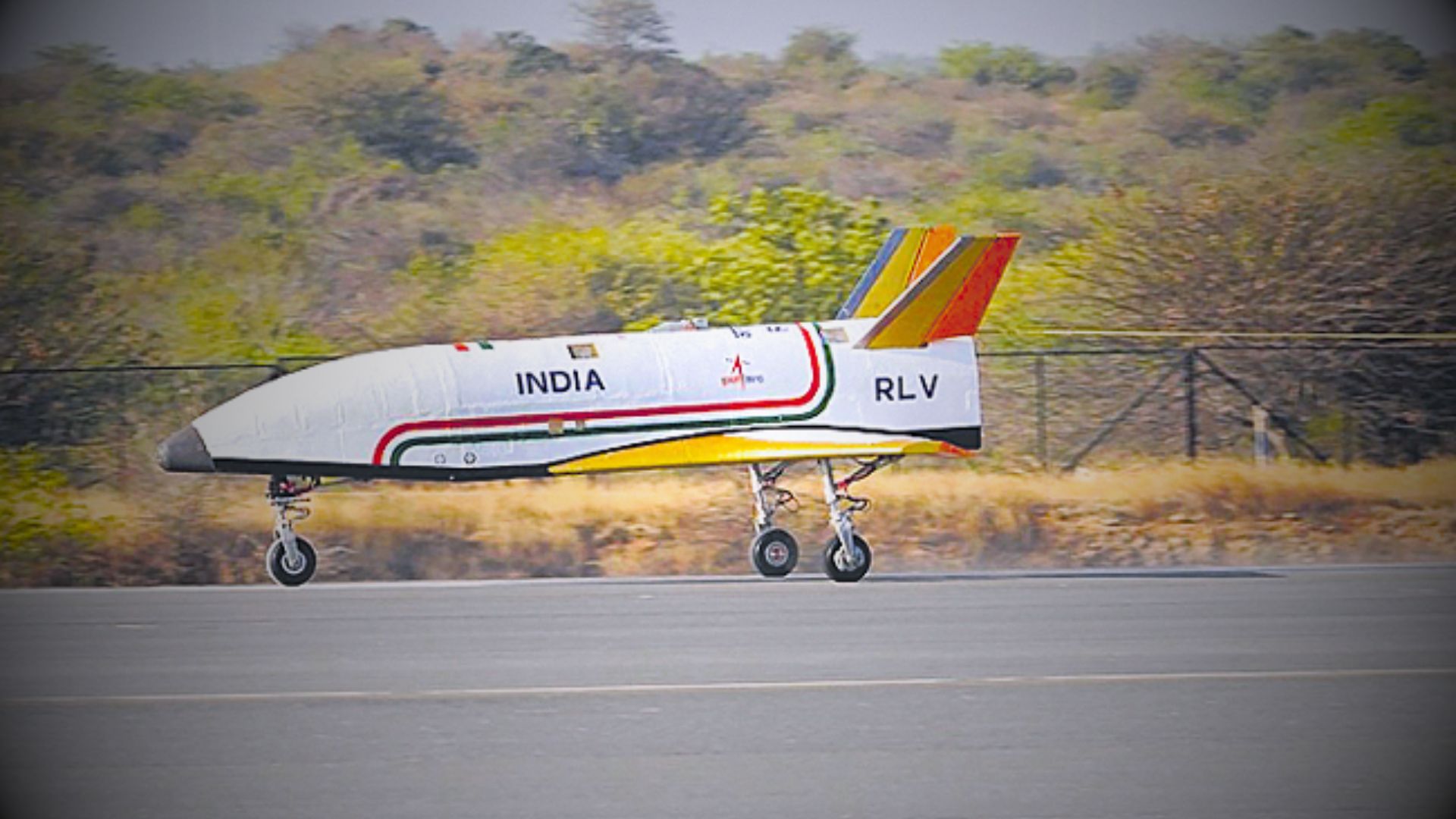
- 23 Mar 2024
Why is it in the News?
The Indian Space Research Organisation (ISRO) successfully conducted the Pushpak Reusable Landing Vehicle (RLV) LEX 02 landing experiment at the Aeronautical Test Range in Chitradurga recently.
What is a Reusable Landing Vehicle (RLV) LEX 02?
- Continuing our exploration into reusable landing vehicles, RLV-LEX-02 marks the second mission in our series conducted at the Aeronautical Test Range.
- Following the success of RLV-LEX-01 last year, this latest endeavor showcases the remarkable autonomous landing capability of our reusable launch vehicle (RLV).
- Notably, RLV-LEX-02 demonstrates the vehicle's ability to navigate and safely land from off-nominal initial conditions immediately upon release from a helicopter.
Methodology of the Experiment:
- The RLV LEX-02 mission showcased the autonomous landing prowess of our reusable launch vehicle under demanding circumstances following its release from a helicopter.
- Dubbed 'Pushpak', this winged vehicle was airlifted by an Indian Air Force Chinook helicopter and released from a height of 4.5 km.
- Navigating autonomously, it adeptly approached the runway, making precise cross-range corrections before executing a flawless landing.
- Utilizing a combination of its brake parachute, landing gear brakes, and nose wheel steering system, it safely came to a stop.
- Notably, the winged body and all flight systems previously employed in RLV-LEX-01 were repurposed for RLV-LEX-02 after undergoing necessary certification and clearances.
- This remarkable mission was executed collaboratively by the Vikram Sarabhai Space Centre (VSSC), the Liquid Propulsion System Centre (LPSC), and the ISRO Inertial Systems Unit (IISU).
What is the Reusable Launch Vehicle?
- The reusable launch vehicle represents a pioneering space plane design characterized by a low lift-to-drag ratio, which mandates high glide angles during approach and consequently requires landing at velocities reaching 350 kmph.
- Integral to its innovation are a multitude of indigenous systems developed meticulously. These encompass sophisticated navigation systems, leveraging pseudolite technology for precise localization, as well as instrumentation and sensor arrays, among other advancements, all spearheaded by ISRO.
Order of the Druk Gyalpo
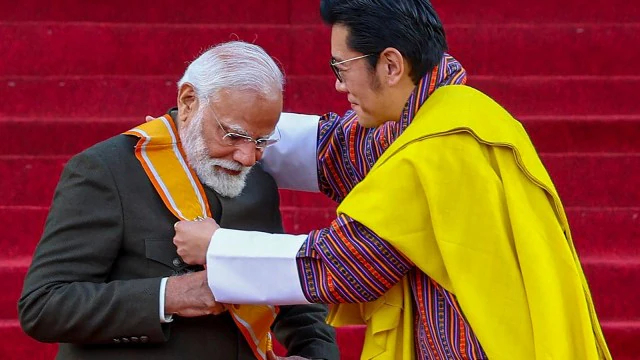
- 23 Mar 2024
Why is it in the News?
Prime Minister Narendra Modi recently received Bhutan’s highest civilian award, the ‘Order of the Druk Gyalpo’, during his two-day State visit to the neighboring nation.
What is the ‘Order of the Druk Gyalpo’ Award?
- The Order of the Druk Gyalpo, Bhutan's most prestigious civilian award, was recently conferred upon Indian Prime Minister Narendra Modi during his two-day State visit to the neighboring nation.
- As the first foreign Head of Government to receive this esteemed accolade, Prime Minister Modi joins a select group of individuals honored for their exceptional contributions to Bhutanese society, service, integrity, and leadership.
- According to the ranking and precedence established within Bhutan's honor system, the Order of the Druk Gyalpo represents the pinnacle of lifetime achievement, taking precedence over all other orders, decorations, and medals.
- Prime Minister Modi received the award in recognition of his outstanding contributions to strengthening India-Bhutan relations and his dedicated service to the Bhutanese nation and its people.
- Past recipients of the Order of the Druk Gyalpo include:
- Her Majesty The Royal Queen Grandmother Ashi Kesang Choden Wangchuck in 2008
- His Holiness Je Thrizur Tenzin Dendup in 2008, and
- His Holiness Je Khenpo Trulku Ngawang Jigme Choedra in 2018.
- With Prime Minister Modi's recent addition to this esteemed list, the Order of the Druk Gyalpo continues to symbolize Bhutan's appreciation for remarkable individuals who significantly impact the country and its people.
Netravati River
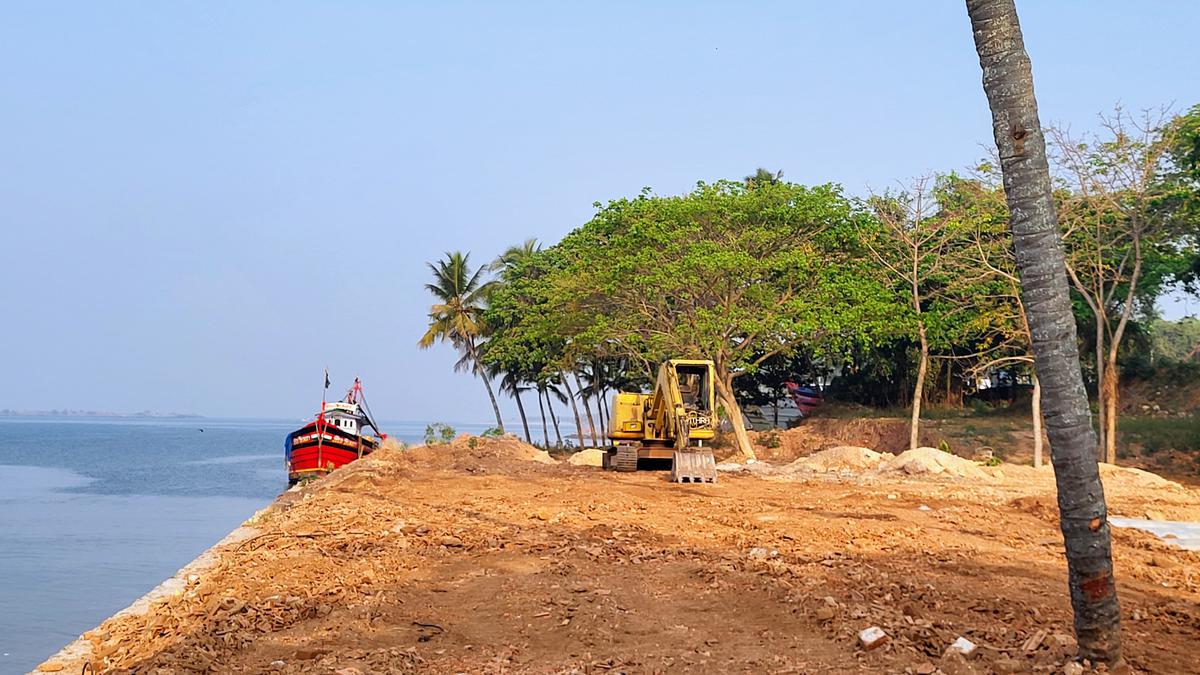
- 23 Mar 2024
Why is it in the News?
The principal bench of the National Green Tribunal (NGT) in New Delhi has initiated action on the Netravati Waterfront Promenade Development Project in Mangaluru.
About the Netravati River:
- The Netravati River, also known as Netravathi Nadi, originates from the Bangrabalige valley, Yelaneeru Ghat in Kudremukh, Chikkamagaluru district, Karnataka, India.
- It passes through the revered pilgrimage site Dharmasthala, earning recognition as one of India's sacred rivers.
- Converging with the Kumaradhara River at Uppinangadi, it eventually flows into the Arabian Sea, south of Mangalore city, serving as the primary water source for Bantwal and Mangalore.
- The Netravati railway bridge, a prominent structure, acts as the gateway to Mangalore.
- Historically known as the Bantwal River, it was documented as unfordable during the South-West Monsoon in the 1855 Gazetteer of Southern India.
- The river's navigability by small country craft and its influence on local geography and transport, including the naming of the Netravati Express train, underscores its significance in the region's history.
- Instances of flooding, notably in 1928 and 1974, have shaped the lives of residents, prompting relocations and resilience
About the National Green Tribunal:
- The National Green Tribunal (NGT) was established under the National Green Tribunal Act of 2010.
- While its principal seat is located in New Delhi, it also holds sessions in Bhopal, Pune, Kolkata, and Chennai.
- The NGT is entrusted with the responsibility of adjudicating applications or appeals, ensuring their final disposition within six months of filing.
Composition:
- The tribunal comprises a Chairperson, Judicial Members, and Expert Members, each serving a non-renewable term of five years.
- The appointment of the Chairperson is made by the Central Government in consultation with the Chief Justice of India (CJI).
- A Selection Committee, constituted by the Central Government, is responsible for appointing both Judicial and Expert Members.
- The tribunal can accommodate a minimum of 10 and a maximum of 20 full-time Judicial and Expert Members.
Powers & Jurisdiction:
- Established to efficiently handle cases concerning environmental protection and conservation of natural resources, including forests.
- It possesses appellate jurisdiction akin to a court.
- While not bound by the procedural formalities outlined in the Code of Civil Procedure, 1908, the NGT operates based on the principles of natural justice.
Hepatitis B

- 23 Mar 2024
Why is it in the News?
Public knowledge and awareness about Hepatitis B, a deadly disease that can cause end-stage liver cirrhosis and liver cancer, is dismal in India, according to a new study conducted by Sir Ganga Ram Hospital, New Delhi.
What is Hepatitis B?
- It is a severe liver infection that can lead to liver damage, cancer, and death.
- The virus spreads through contact with an infected person's blood or bodily fluids.
- One can get hepatitis B through sexual contact, sharing needles or other drug-injection equipment, or from mother to child during childbirth.
Symptoms of Hepatitis B:
- Hepatitis B is a severe viral infection of the liver that can cause inflammation and scarring.
- Symptoms include fatigue, fever, abdominal pain, dark urine, joint pain, and jaundice.
Causes of Hepatitis B:
- Hepatitis B is caused by the hepatitis B virus (HBV).
- HBV is found in the blood and body fluids of an infected person. It can spread through contact with fluids, such as:
- Blood, through needle sharing or accidental needle sticks
- Contact with body fluids, such as saliva, etc.
- Sexual contact with someone who has HBV
- From a mother to a child through childbirth
- Hepatitis B can also spread through contact with contaminated surfaces, such as:
- Sharing personal items like toothbrushes or razors with someone who has HBV
- Getting a tattoo or body piercing with contaminated equipment
Types of Hepatitis B:
- There are three main types of hepatitis B: acute, chronic, and carriers.
- Acute hepatitis B is a short-term illness that occurs within the first six months after exposure to the virus. It is the most common type of hepatitis B in children.
- Chronic hepatitis B is a long-term illness that can lead to serious health problems, including liver failure and liver cancer.
- Carriers of hepatitis B have the virus in their blood but do not show any symptoms.
Treatment for Hepatitis B
- Several medications can help treat hepatitis B.
- These include antiviral drugs, which can help reduce the amount of virus in the body, and immunomodulators, which can help boost the immune system to better fight the virus.
- If the liver is damaged, one may also need medication to help protect it from further damage.
- HBIG (Hepatitis B Immuno Globulin) is one of the best ways to treat hepatitis B.
- Adults who have been exposed to hepatitis should get HBIG and vaccination as soon as possible, preferably within 24 hours but not later than 14 days after the exposure.
Prevention of Hepatitis B:
- The best way to prevent hepatitis B is to get vaccinated.
- The vaccine is given as a series of shots.
- The first shot is usually given at birth; the rest at 1–2 months old, 6–18 months old, and 4–6 years old.
- If one was not vaccinated as a child, they can receive the vaccines as an adult.
PIB Fact Check Unit (FCU)
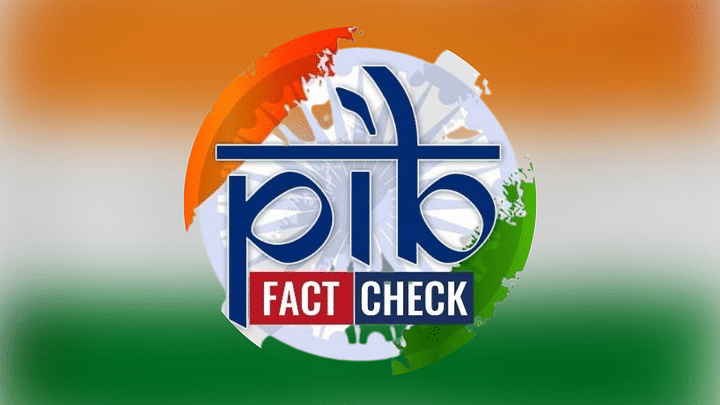
- 22 Mar 2024
Why is it in the News?
Recently, the Supreme Court stayed the Centre’s notification of the Fact Check Unit (FCU) under the Press Information Bureau (PIB) until the Bombay High Court arrives at a final decision on the challenge to the amended Information Technology (IT) Rules.
Background:
- Under the Government of India (Allocation of Business) Rules, 1961, the Ministry of Information and Broadcasting (MIB) is entrusted with the responsibility of disseminating information about government policies, schemes, and programs through various mediums of communication.
- In fulfilling its role, the Ministry publicizes the policies, initiatives, schemes, and programs of the Government of India through press releases, press conferences, webinars, publication of books, etc.
- To carry out this crucial function, the Ministry has several attached and subordinate offices, including the Press Information Bureau (PIB).
- A significant aspect of the responsibility of facilitating public information about the functioning of the Government of India involves countering the dissemination of fake, false, and misleading information.
- The PIB has been carrying out this function for a long through a wide distribution of accurate and reliable information, issuing rebuttals, etc.
- In the age of social media where information spreads rapidly, the spread of fake and manipulated information, especially related to the functioning of a democratically elected Government, is dangerous to society as it has the potential to intensify social, economic, and political conflicts, weaken public trust in democratic institutions, and even endanger the life of the citizens.
What is the PIB Fact Check Unit (FCU)?
- The Press Information Bureau has been at the forefront of taking proactive measures to combat fake news related to the Government of India.
- In November 2019, PIB established a Fact Check Unit (FCU) to tackle the issue of fake news about the Government of India, its various ministries, Departments, Public Sector Undertakings, and other Central Government organizations.
- The unit verifies claims about government policies, regulations, announcements, and measures.
- Through an established rigorous fact-checking procedure, the PIB Fact Check Unit helps dispel myths, rumors, and false claims and provides accurate and reliable information to the public.
Organization
- The PIB Fact Check Unit is headed by a senior DG/ADG level officer of the Indian Information Service (IIS).
- The day-to-day operations of the Unit are handled by IIS officers at various levels. The Unit reports to the Principal Director General, PIB who functions as the Principal Spokesperson of the Government of India.
Fact-Check Mechanism
- Users send requests over WhatsApp, email, or a web portal. Each such request received is considered a ‘Query’.
- Queries are segregated by the Unit based on their relevance to matters about the Government of India.
- Only queries about the Government of India are considered and taken up as Actionable Queries, while others are deemed not relevant for action.
- The information in question is checked rigorously through multiple layers of cross-checking through Government Open-source information, use of technological tools, and verification from the concerned Government of India organization.
- Should the Unit come across a piece of information that the Unit ascertains must be busted publicly for the larger benefit of the people of India, after investigation and verification from official & authoritative sources, it publishes a 'Fact Check' on its social media platforms.
- Often a single fact check can be a result of multiple queries.
Fact-checked content can be segregated into the following three categories:
- Fake: any factually incorrect news, content, or, piece of information related to the Government of India, spread intentionally or unintentionally, that can deceive or manipulate the audience, with or without the intention to cause potential harm, can be flagged as Fake
- Misleading: any information presented, either partially true or with selective presentation of facts or figures or with distortion of facts or figures and to deceive or mislead the recipient of the information.
- True: any information that is found to be factually correct after investigation
Shanghai Cooperation Organisation (SCO) Startup Forum
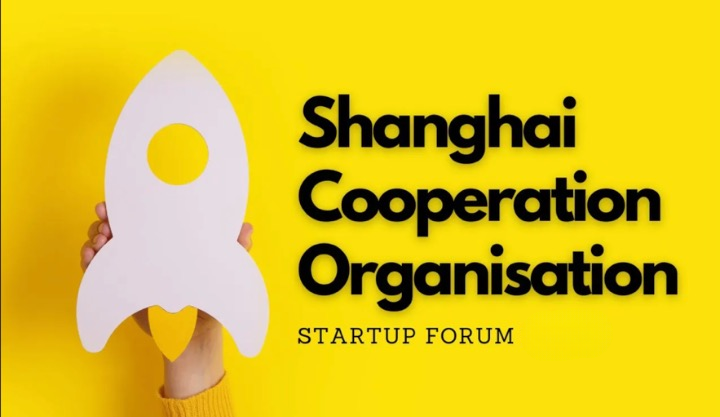
- 22 Mar 2024
Why is it in the News?
India will host the fifth meeting of the Shanghai Cooperation Organisation startup forum in January next year according to the commerce and industry ministry.
About the Shanghai Cooperation Organisation Startup Forum:
- The SCO Startup Forum is a platform for the stakeholders from the startup ecosystems from all SCO Member States to interact and collaborate.
- The entrepreneurial activities aim to empower the local startup communities in the SCO Member States.
- The SCO Startup Forum aims to create multilateral cooperation and engagement for startups among the SCO Member States.
- This engagement will empower the local startup ecosystems in the SCO Member States.
The following are the objectives of the engagement:
- Sharing of best practices to promote entrepreneurship and innovation to build knowledge-exchange systems
- Bringing Corporations and Investors across to work closely with startups and provide local entrepreneurs with much-needed support and market access
- Increasing scaling opportunities for startups by providing solutions in the field of social innovation and providing Governments with a plethora of innovative solutions
- Creating open procurement channels to enable matchmaking for procuring innovative solutions from startups
- Facilitating cross-border incubation and acceleration programs that will enable the startups to explore international markets and get focused mentorship.
Upcoming Events:
- India is set to host the second meeting of the Special Working Group for Startups and Innovation (SWG) in November 2024 and the SCO Startup Forum 5.0 in January 2025.
Past Initiatives:
- SCO Startup Forum 1.0: Established in 2020, laying the groundwork for multilateral cooperation among SCO Member States' startups.
- SCO Startup Forum 2.0: Held virtually in 2021, introducing the SCO Startup Hub, a centralized platform for the SCO startup ecosystem.
- SCO Startup Forum 3.0: Organized physically in 2023 by the Department for Promotion of Industry and Internal Trade (DPIIT), marking a significant milestone for SCO Member States' startup collaboration.
- 1st Meeting of the SWG: Led by India, the first meeting of the SCO Special Working Group on Startups and Innovation in 2023 focused on the theme 'Growing from Roots', emphasizing foundational growth within the startup ecosystem.
Usha Mehta
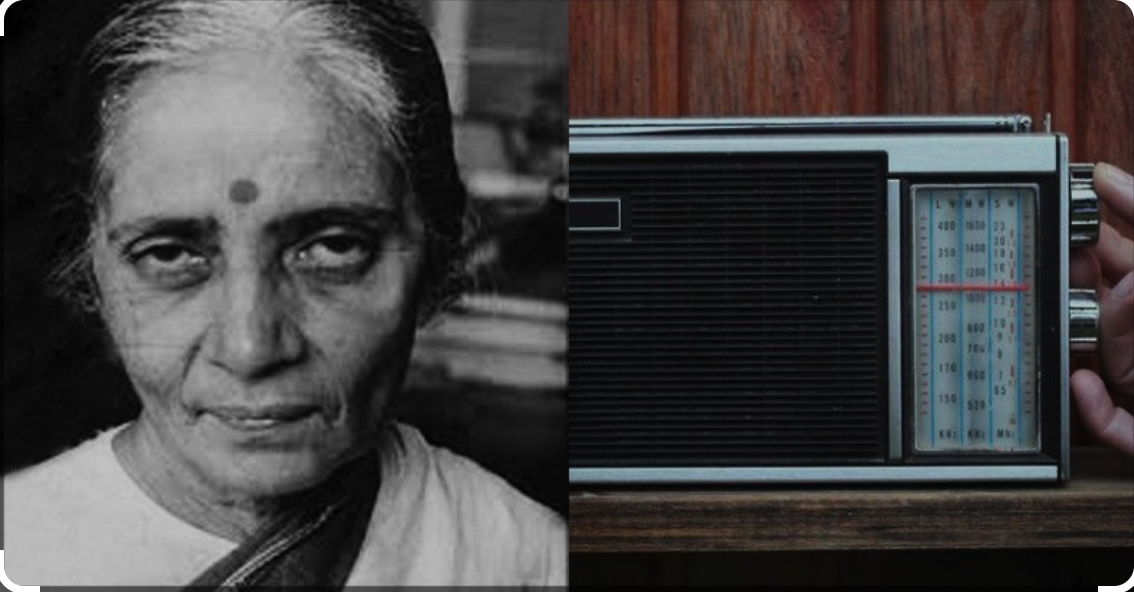
- 22 Mar 2024
Why is it in the News?
A recent film has been launched, depicting the inspiring life story of Indian freedom fighter Usha Mehta.
About Usha Mehta:
- Born in 1920 in the village of Saras, near Surat in Gujarat, Usha Mehta, affectionately known as Ushaben, embodied the Gandhian principles of non-violence and civil disobedience from a young age.
Early Activism:
- At the tender age of eight in 1928, she participated in a protest march against the Simon Commission, demonstrating her early commitment to India's independence struggle.
- The Secret Congress Radio: In 1942, amidst the fervor of the Quit India Movement, Usha Mehta and her colleagues boldly established the Secret Congress Radio.
- This clandestine radio station played a pivotal role in connecting freedom movement leaders with the masses, ensuring the dissemination of crucial information, and maintaining the spirit of resistance against colonial rule.
Establishing an Underground Radio Station:
- With the outbreak of the War in 1939, the British government imposed stringent measures, including the suspension of all amateur radio licenses throughout the Empire.
- Operators were mandated to surrender their equipment to the authorities, under threat of severe repercussions for non-compliance.
Key Figures in the Operation:
- Usha Mehta, alongside Babubhai Khakar, Vithalbhai Jhaveri, and Chandrakant Jhaveri, played instrumental roles in orchestrating the Congress Radio initiative, defying the ban on amateur radio broadcasting.
The Congress Radio Trial:
- The trial of the five accused individuals—Usha Mehta, Babubhai Khakar, Vithalbhai Jhaveri, Chandrakant Jhaveri, and Nanak Gainchand Motwane, who facilitated crucial equipment—captivated public attention in Bombay.
- While Vithalbhai and Motwane were acquitted, Mehta, Babubhai, and Chandrakant faced severe sentences for their involvement.
Usha Mehta's Legacy:
- Following her release from Pune's Yerawada Jail in March 1946, Usha Mehta was lauded in nationalist circles as "Radio-ben," symbolizing her courageous defiance and commitment to the freedom struggle through underground broadcasting.
Independence, PhD, & Padma Vibhushan
- When India finally achieved independence in 1947, the British had divided the country into two parts – India and Pakistan, sending the region into chaos.
- The divide results in massive bloodshed with more than 10 million Hindus, Muslims, and Sikhs seeking to find their home.
- Mehta was torn. “In a way, I was very happy, but sad at the same time because of partition.
- It was an independent India but a divided India,” she was quoted as saying in the book Freedom Fighters Remembered.
- She was away from active politics in independent India due to her ill health but continued to remain a staunch Gandhian till the very end.
- She penned the script for a documentary on Gandhi produced by her colleague at the radio station, and earned a PhD in Gandhian thought at the University of Bombay.
- She taught political science and ran the politics department at the university.
- She also taught at Wilson College for 30 years.
- She was also the president of the Gandhi Peace Foundation.
- In 1998, she was awarded India’s highest civilian honor, the Padma Vibhushan.
- She lived a simple life and never married or had children.
- She died on 11 August 2000 at the age of 80.
International Telecommunication Union (ITU)
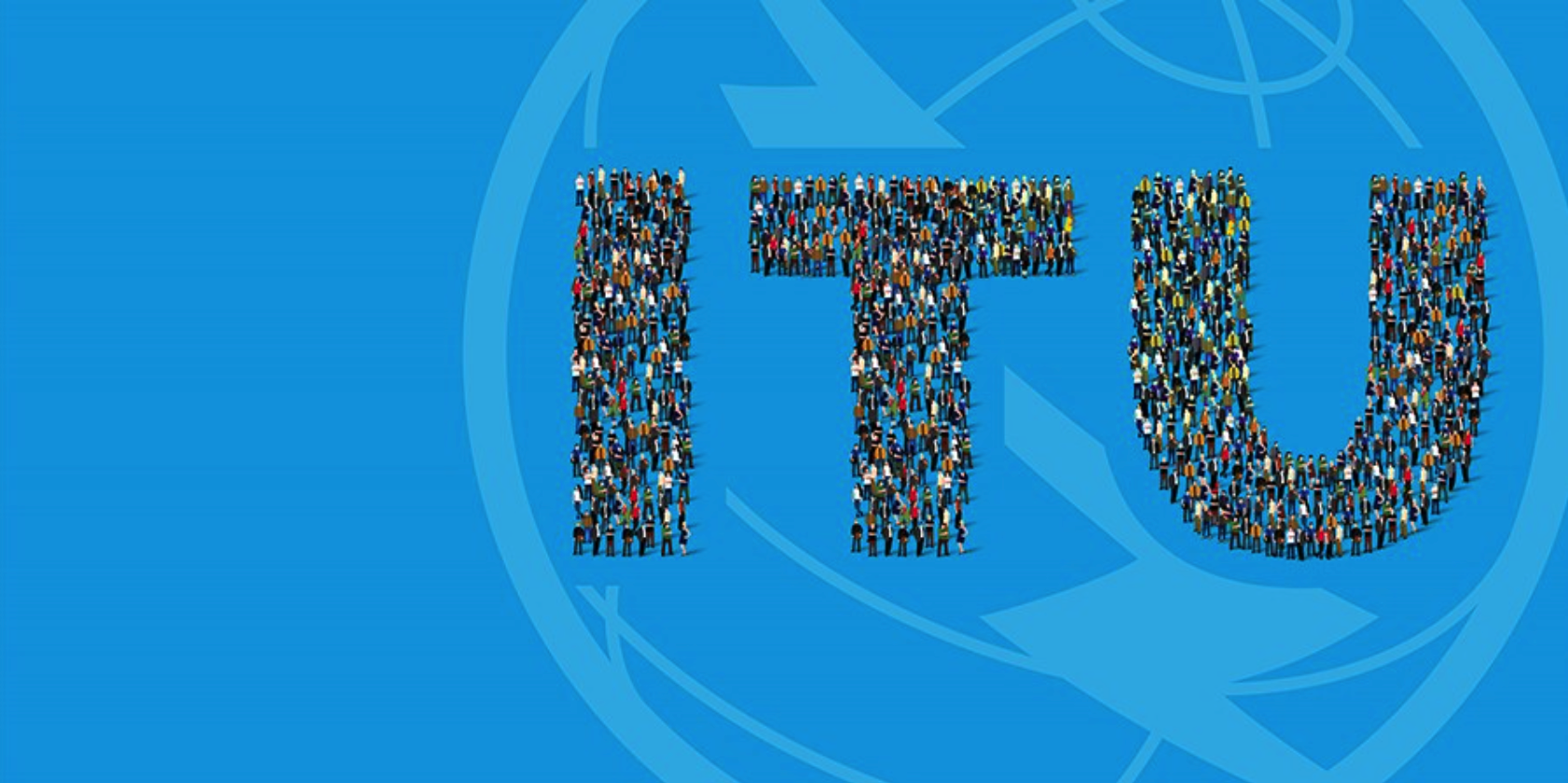
- 22 Mar 2024
Why is it in the News?
Dr. Neeraj Mittal's unanimously elected as co-chair of the International Telecommunication Union (ITU)'s digital innovation board recently.
About the International Telecommunication Union (ITU):
- Established in 1865 as the International Telegraph Union, the ITU has evolved into the United Nations specialized agency for information and communication technologies (ICT).
- Recognized as a vital intergovernmental organization, the ITU facilitates collaboration between governments and private sector entities to advance global telecommunication and ICT services.
Key Points:
- Status: Designated as a specialized agency of the United Nations in 1947.
- Membership: Boasting a diverse membership of 193 countries and over 1000 companies, universities, and international and regional organizations.
Functions:
- Allocation of global radio spectrum and satellite orbits.
- Coordination and establishment of technical standards about telecommunication/ICT.
- Initiatives to enhance ICT accessibility in underserved communities worldwide.
- India's Engagement: India has maintained an active presence within the ITU since 1869, consistently participating in its endeavors.
- Notably, India has been a regular member of the ITU Council since 1952.
- Headquarters: Located in Geneva, Switzerland, the ITU serves as the global epicenter for fostering collaboration and innovation in the realm of ICT.
What is the Digital Innovation Board?
- The Digital Innovation Board is a pivotal component of the Innovation and Entrepreneurship Alliance for Digital Development, aimed at addressing pressing needs within the realm of innovation as outlined in the Kigali Action Plan, which was adopted at the World Telecommunication Development Conference 2022.
- Comprised of Ministers and Vice Ministers of Telecom/ICT from 23 Member Countries of the International Telecommunication Union (ITU), spanning across Asia, Europe, Africa, and North, and South America, this board serves as a strategic advisory body.
- ITU initiated the Innovation and Entrepreneurship Alliance for Digital Development to tackle significant challenges and opportunities in innovation.
- This alliance operates through three key mechanisms:
- The Digital Transformation Lab
- The Network of Acceleration Centers, and
- The Digital Innovation Board.
- The Digital Innovation Board's primary objective is to offer strategic guidance, expertise, and advocacy in promoting local capacity building, fostering innovation, and encouraging entrepreneurship in digital development.
- Its overarching mission is to cultivate a more inclusive and equitable digital future for all stakeholders.
Enforcement Directorate (ED) Arrests Delhi Chief Minister
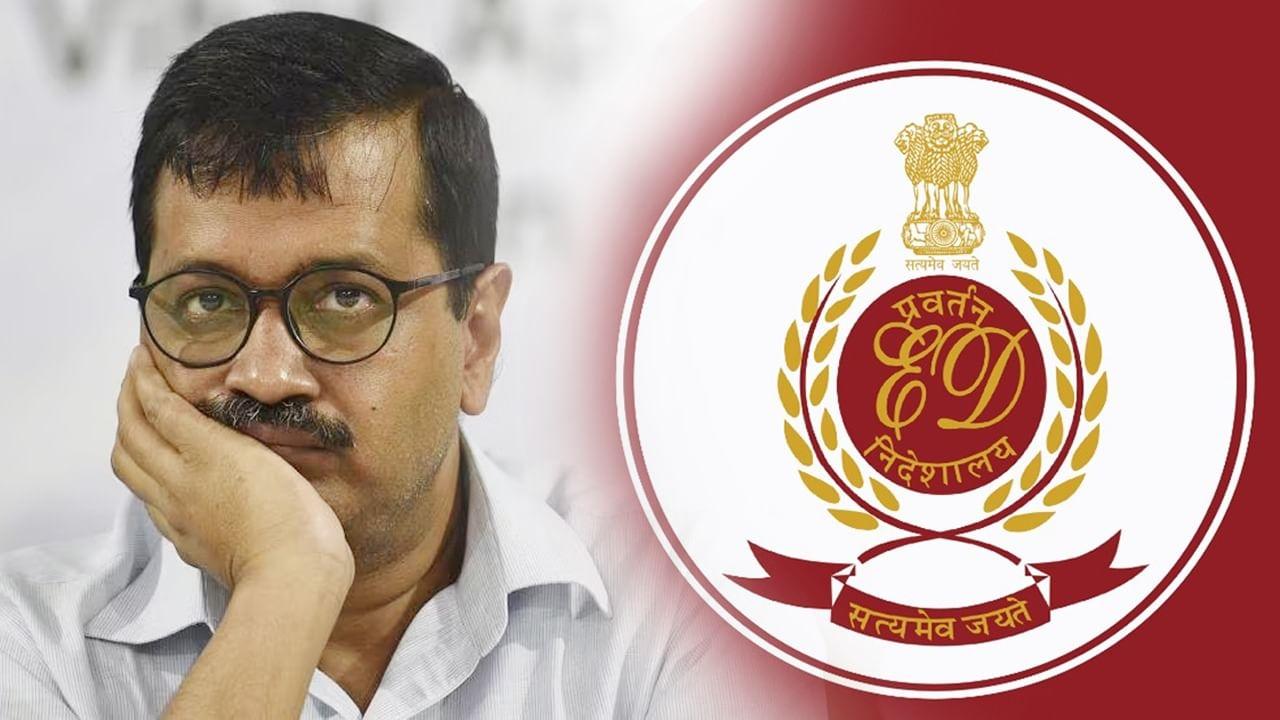
- 22 Mar 2024
Why is it in the News?
Delhi Chief Minister Arvind Kejriwal was recently arrested in the Delhi excise policy case, in which he had been issued multiple summons by the Enforcement Directorate (ED).
About the Enforcement Directorate (ED):
- Established in 1956 as the 'Enforcement Unit' under the Department of Economic Affairs, the Enforcement Directorate (ED) underwent a name change in 1957.
- Presently, ED operates under the Department of Revenue (Ministry of Finance) administrative control for operational purposes.
Roles and Responsibilities:
- ED is responsible for enforcing the Foreign Exchange Management Act, 1999 (FEMA) and certain provisions of the Prevention of Money Laundering Act (PMLA).
- In case of FEMA violations, ED has the authority to attach the assets of offenders.
- ED is also empowered to conduct searches, seizures, arrests, prosecutions, and surveys against PMLA offenses.
Appointment Process for ED Director:
- The Central Government appoints the ED Director based on the recommendations of a committee, which comprises:
Chairperson: Central Vigilance Commissioner
Members: Vigilance Commissioners, Home Secretary, Secretary DOPT, and Revenue Secretary.
What is the Delhi Excise Policy 2021-22?
- The Delhi Excise Policy 2021-22, also known as the new liquor policy, was introduced on November 17, 2021, to transform liquor sales in the city.
- This policy marked a significant departure from the traditional model by privatizing liquor shops and aiming to enhance customer experience while curbing black market activities.
- However, amidst controversy and allegations of procedural irregularities, Delhi ultimately reverted to its previous excise regime.
Key Features:
- The new policy divided Delhi into 32 zones, each open for bidding by firms, departing from individual licenses to zone-based bidding.
- 849 retail vend licenses were auctioned by the Excise department.
- Notably, the policy allowed for discounts to retail customers and reduced dry days to three from 21.
- It proposed innovative measures such as home delivery of liquor and lowering the drinking age from 25 to 21, although these were not implemented.
Controversy:
- Before implementation, the policy underwent scrutiny by the Chief Secretary, who alleged procedural lapses and irregularities.
- The report implicated the Deputy CM for making unilateral decisions, leading to financial losses and allegations of kickbacks.
- These kickbacks were purportedly used to influence elections in other states, leading to a CBI investigation and subsequent arrest of the Deputy CM and others.
- The Enforcement Directorate (ED) also initiated investigations into alleged money laundering, with claims of substantial proceeds of crime and kickbacks reaching prominent political figures.
- In essence, the Delhi Excise Policy 2021-22, while aiming for modernization and improved governance in liquor sales, was marred by controversy and allegations of corruption, prompting a thorough investigation into its implementation and aftermath.
International Day of Forests 2024
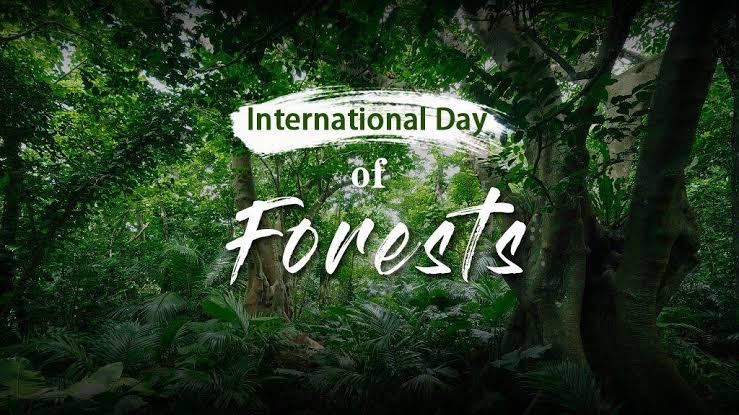
- 21 Mar 2024
Why is it in the News?
On March 21, 2024, people around the world celebrate World Forest Day. It's a day to remind everyone about how important forests are and all the good things they do for us.
About World Forest Day:
- World Forestry Day, also known as International Day of Forests, is celebrated on March 21 each year.
- The day aims to promote the sustainable management, conservation, and development of all types of forests for the benefit of current and future generations.
The theme for International Day of Forests 2024:
- This year's theme, "Forests and Innovation: New Solutions for a Better World" highlights the critical role of innovation and technology in protecting our forests.
- From advanced monitoring systems that track deforestation to sustainable forestry practices, innovation is key to overcoming the challenges threatening our forests.
History of International Day of Forests:
- The United Nations General Assembly announced March 21 to be the International Day of Forests in 2012.
- The day aims to respect and promote the value of a wide range of forests. Countries are encouraged to take part in regional, global, and local drives to set up a scope of forest and tree-related campaigns, like planting campaigns.
- The Food and Agriculture Organization of the United Nations (FAO) and the United Nations Forum on Forests are the coordinators of the International Day of Forests.
Importance of International Day of Forests:
- As per the UNGA, "The United Nations Forum on Forests and the Food and Agriculture Organization of the United Nations (FAO), in collaboration with Governments, the Collaborative Partnership on Forests and other relevant organizations in the field are responsible for organizing the events and campaigns related to the World Forestry Day."
- The importance of the International Day of Forests is to spread awareness and give instruction at all levels to guarantee feasible forest management and biodiversity preservation.
The Enduring Significance of Forests:
- Forests are often referred to as the "lungs of the planet" for a reason.
They play a vital role in:
- Combating Climate Change: Forests act as carbon sinks, absorbing and storing vast amounts of carbon dioxide, a major greenhouse gas.
- Protecting Biodiversity: Forests provide habitats for countless species of plants and animals, ensuring the health and balance of ecosystems.
- Providing Clean Air and Water: Forests filter air and water, regulating our climate and providing us with essential resources.
- Supporting Livelihoods: Millions of people around the world depend on forests for food, medicine, and income generation.
Celebrating and Taking Action:
- World Forestry Day is a springboard for action and we can get involved by:
- Support Organizations: Donate to or volunteer with organizations working towards forest conservation and sustainable forestry practices.
- Reduce Consumption: Make conscious choices to reduce consumption of paper and wood products, minimizing environmental footprint.
- Plant a Tree: Plant a tree in our community or support tree-planting initiatives.
- Spread Awareness: Educate ourselves and others about the importance of forests and the threats they face.
- By taking action, big or small, we can all contribute to a future where our forests continue to thrive, ensuring a healthier planet for generations to come.
World Inequality Lab Report
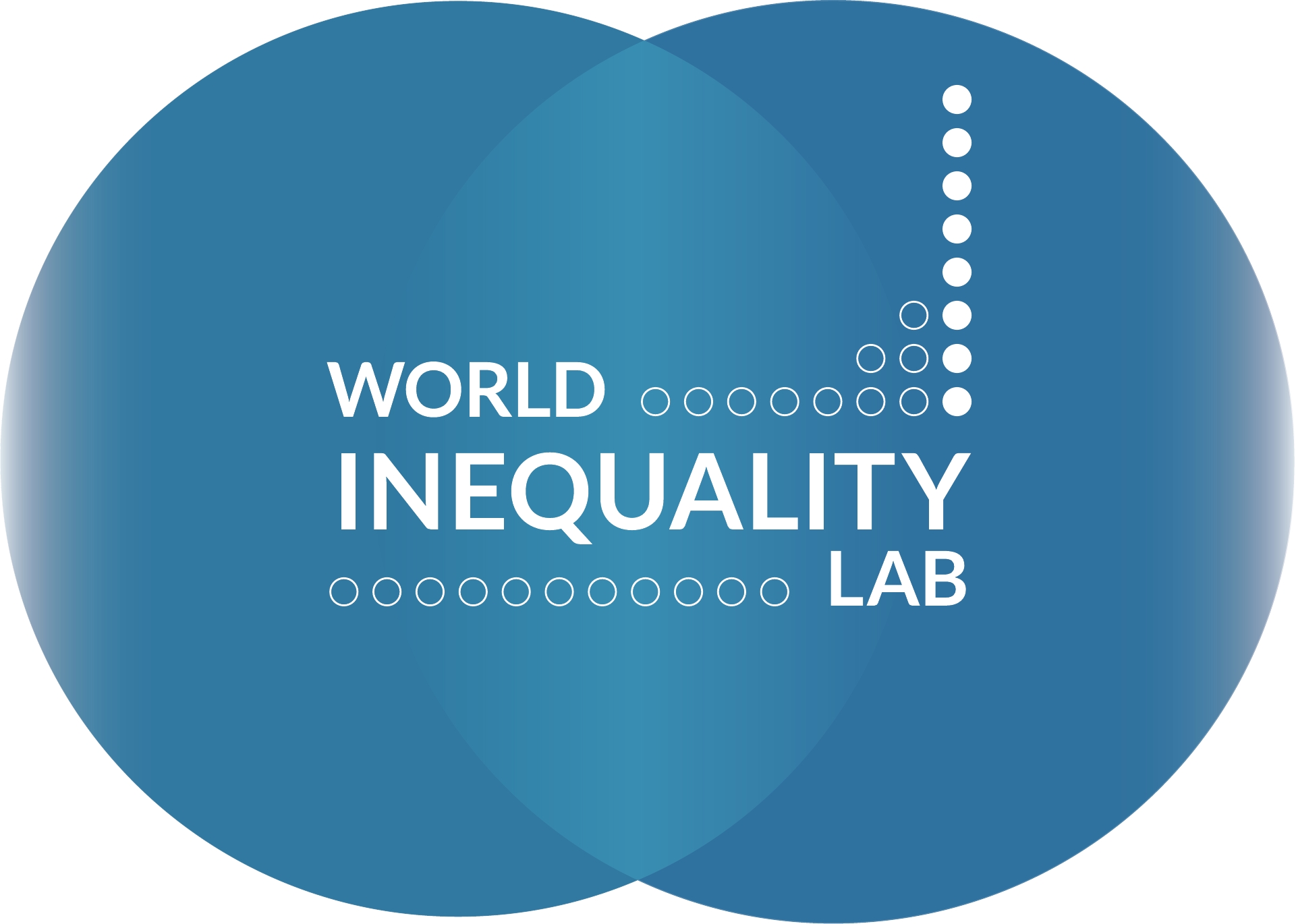
- 21 Mar 2024
Why is it in the News?
India’s top 1 percent income and wealth shares have reached historical highs and are among the very highest in the world, according to a paper released by World Inequality Lab.
What is the World Inequality Lab?
- The World Inequality Lab is a global research center that focuses on studying inequality and public policies that promote social, economic, and environmental justice.
The lab's main missions include:
- Expanding the World Inequality Database: The lab gathers and analyzes data on income, wealth, and capital asset distribution across various countries.
- Publishing research: The lab releases working papers, reports, and methodological handbooks to contribute to the understanding of global inequality dynamics.
- Collaborating with international researchers: The lab works with a network of researchers from around the world to compile and analyze data for the World Inequality Database.
- Promoting public debate: The lab aims to raise awareness about inequality by disseminating their findings and engaging in public discourse.
- The World Inequality Lab is known for producing the World Inequality Report, which offers up-to-date and comprehensive data on different aspects of inequality globally, including wealth, income, gender, and ecological inequality.
Key Insights from the Research Paper Released by the WIL:
- A team of four economists, including Nitin Kumar Bharti, Lucas Chancel, Thomas Piketty, and Anmol Somanchi, has compiled comprehensive time series data on income and wealth inequality in India.
- Titled "The Billionaire Raj," the paper asserts that India's current level of inequality surpasses that of the British Raj era.
- In the fiscal year 2022-23, India witnessed its highest recorded levels of income and wealth concentration among the top 1%: 22.6% and 40.1%, respectively.
- India's top 1% income share is noted to be among the highest globally, even surpassing countries like South Africa, Brazil, and the US.
- While India's top 1% holds a significant share of income, the wealth share of this segment is comparatively lower than in South Africa and Brazil.
- The paper accentuates the stark disparities among various income groups in India.
- For instance, the wealthiest 1% possess an average wealth of Rs 5.4 crore, 40 times the national average, whereas the bottom 50% and the middle 40% hold significantly lower amounts: Rs 1.7 lakh (0.1 times the national average) and Rs 9.6 lakh (0.7 times the national average), respectively.
- At the pinnacle of the wealth distribution, approximately 10,000 individuals out of 92 million Indian adults possess an average wealth of Rs 2,260 crore, a staggering 16,763 times the average Indian wealth.
Key Recommendations from the Research Paper:
- The research paper has meticulously compiled data from various sources to construct its estimates on income and wealth inequality.
- Given the absence of official income estimates and wealth statistics based on surveys in India, the paper underscores the necessity for reliable data sources in these domains.
- To tackle the issue of inequality in India, the paper proposes a range of policy interventions.
- These measures encompass a comprehensive overhaul of the tax structure to encompass both income and wealth considerations, alongside substantial public investments in critical areas such as healthcare, education, and nutrition.
- A notable suggestion outlined in the report is the implementation of a "super tax" of 2% on the net wealth of the 167 wealthiest families recorded in 2022-23. This levy is projected to generate revenues equivalent to 0.5% of the national income.
- Furthermore, the imposition of such a tax is envisaged not only to create fiscal leeway for essential investments but also to serve as an effective tool in combatting entrenched inequality within the society.
Project GR00T

- 21 Mar 2024
Why is it in the News?
AI chip leader Nvidia on Tuesday (March 19) announced Project GR00T or Generalist Robot 00 Technology, which promises to revolutionize the evolution of humanoid robots.
What is Project GR00T?
- Project GR00T stands for Generalist Robot 00 Technology.
- It is essentially a general-purpose foundation model for humanoid robots.
- This ambitious project aims to create a general-purpose foundation model for humanoid robots, enabling them to understand natural language, learn new skills from observing humans, and solve various tasks in real-time.
- Robots built on this platform are designed to understand natural language and emulate movements by observing human actions, such as instantly learning coordination, dexterity, and other skills.
- This can help the robots navigate and engage with the real world around them.
- The goal of Project GR00T is to advance the field of embodied artificial general intelligence (AGI) and drive breakthroughs in robotics.
- NVIDIA intends to leverage its expertise in AI and its technological resources to develop this foundational model, which would provide humanoid robots with human-like abilities, such as emotion, reaction, and movement.
The Potential Consequences of Project GR00T and Humanoid Robots in the Workforce:
- As humanoid robots, such as those envisioned by NVIDIA's Project GR00T, become more advanced and capable of handling various hazardous or repetitive tasks, concerns arise over potential job displacement.
- For instance, Nvidia's partnership with Hippocratic AI to develop AI-powered healthcare agents may lead to a reduction in the demand for nurses.
- However, proponents argue that these robots can serve as valuable aids for humans, enhancing their quality of life and complementing their skills rather than supplanting them entirely.
- Consequently, the impact of humanoid robots on the workforce may ultimately depend on their successful integration into existing labor structures, as well as the willingness and ability of society to adapt to this transformative technology.
Lianas and its Impact on Forest Ecosystem
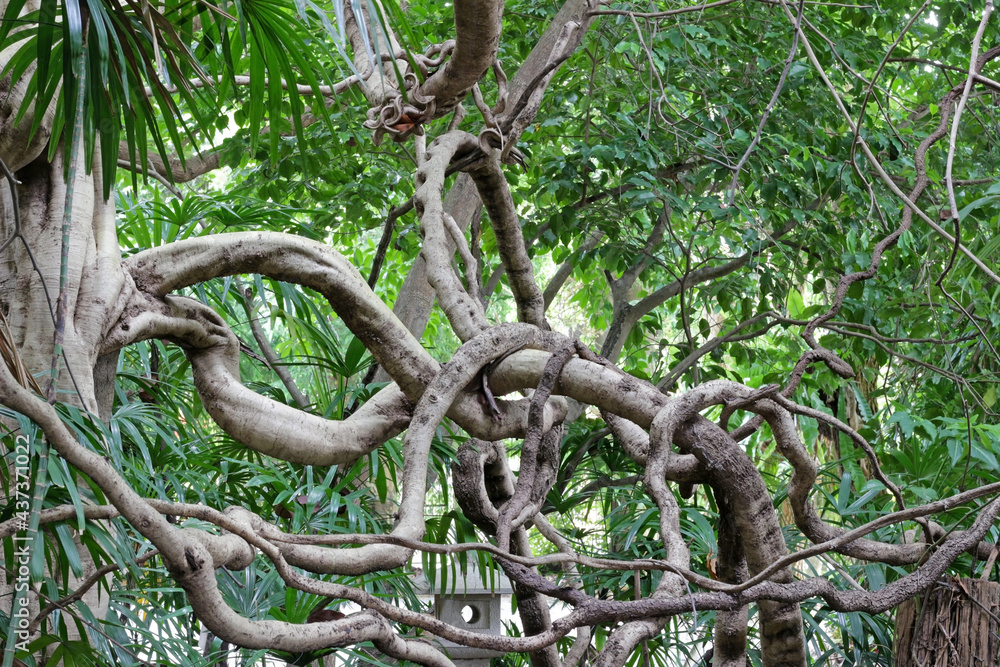
- 21 Mar 2024
Why is it in the News?
Amidst escalating global temperatures, a pioneering study spearheaded by the University of the Sunshine Coast, Australia, sheds light on an unexpected threat posed by Lianas.
What are Lianas?
- Lianas are long-stemmed, woody vines that have their roots in the ground but use the trunks and branches of trees to climb their way up toward the canopy in order to reach sunlight.
- The term “liana” applies more to this type of lifestyle than to any specific family of plants, as lianas come from a variety of different taxonomic groups.
- They are found in tropical forests all over the world.
- These plants have developed a unique climbing strategy to reach the forest canopy and maximize their access to sunlight for photosynthesis.
- Their flexible stems, adventitious roots, and specialized structures such as tendrils and hooks allow them to twist, twine, and ascend the trunks and branches of trees.
How do Lianas Impact the Forest Ecosystem?
- Lianas can have both positive and negative influences on forest ecosystems, depending on their abundance and the specific environmental context.
Positive Impacts of Lianas on Forests:
- Biodiversity: Lianas enhance forest biodiversity by creating additional habitats, providing food resources, and supporting the life cycles of numerous organisms.
- Insects, birds, mammals, and even some epiphytic plants rely on lianas for food, shelter, and reproductive sites.
- Nutrient Cycling: Lianas play a crucial role in nutrient cycling within forests. By absorbing nutrients from the forest floor and transferring them to the canopy through their stems, lianas facilitate nutrient exchange between different vertical layers of the forest.
Negative Impacts of Lianas on Forests:
- Competition for Resources: High densities of lianas can lead to competition with trees for essential resources like light, water, and nutrients.
- This competition may impede tree growth, reduce seedling establishment, and hinder forest regeneration.
- Impact on Forest Structure and Stability: By increasing the likelihood of tree fall during storms or strong winds, lianas can negatively affect forest structure and composition.
- When lianas grow on tree crowns, they increase the weight and wind resistance of trees, making them more susceptible to uprooting.
- Economic Implications: Lianas can also impact the growth and reproduction of commercially valuable tree species, which has economic implications for forest management and timber production.
- Moreover, liana-infested trees often have reduced timber quality due to distortions in the tree trunk and branches.
- Low Carbon Sequestration: Their lower carbon sequestering capacity compared to trees further exacerbates the threat to carbon storage.
Pusa Basmati Rice
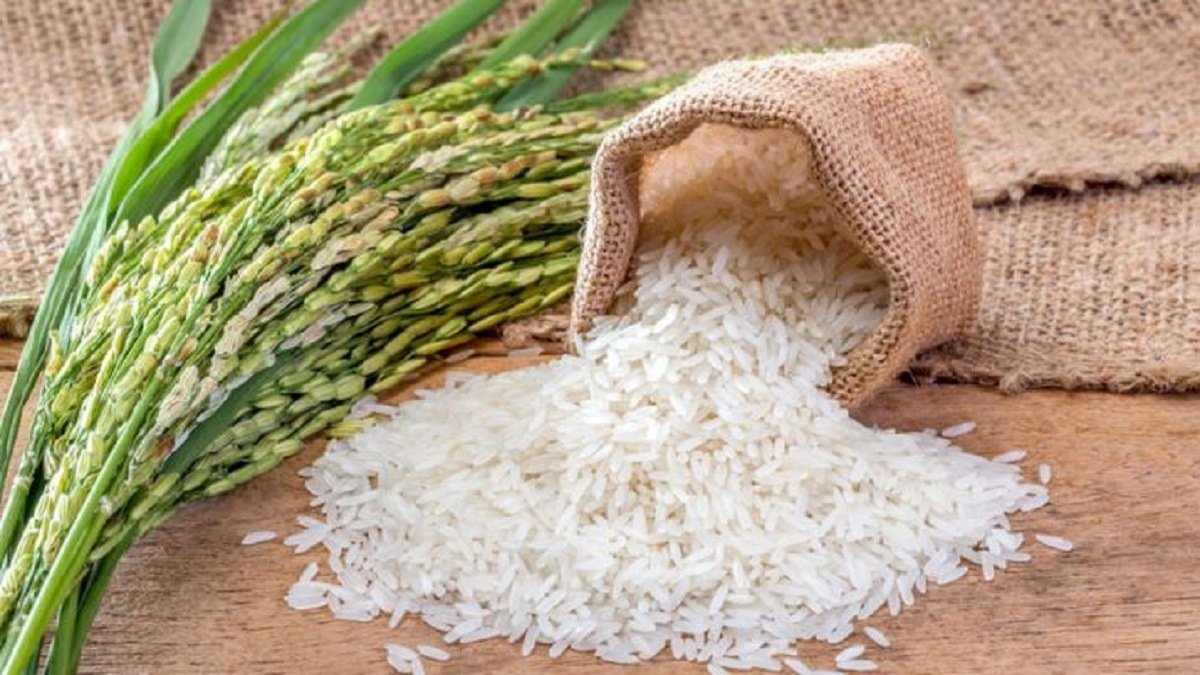
- 21 Mar 2024
Why is it in the News?
Even as basmati rice exports from the country are poised to scale a new high, scientists at the Indian Agricultural Research Institute (IARI) have red-flagged the “illegal” cultivation of its blockbuster varieties in Pakistan.
Unauthorized Cultivation and Export of Pusa Basmati Rice Varieties in Pakistan:
- Despite being officially registered and protected Indian varieties, several IARI-bred Basmati rice varieties, such as Pusa Basmati 1121, Pusa Basmati-6, and Pusa Basmati 1509, are being illegally cultivated and marketed in Pakistan.
- Recent YouTube videos even feature newer IARI varieties like Pusa Basmati-1847, PB-1885, and PB-1886, released in late 2021.
- Pakistan's unauthorized Basmati exports have been substantial, with 7.58 lt ($694.55 million) in 2021-22 and 5.95 lt ($650.42 million) in 2022-23 (July-June).
- This growth is partly due to the depreciation of the Pakistani rupee, allowing the country to offer lower export prices than India.
- The proliferation of these protected varieties in Pakistan can be attributed to the ease of seed multiplication.
- With just a small quantity of seeds, large-scale cultivation can be established within two years of the variety's release in India.
- This unauthorized cultivation not only undermines India's intellectual property rights but also impacts the competitiveness of India's Basmati rice exports in the global market.
What is the Basmati Crop Improvement Program?
- The Basmati Crop Improvement Program focuses on refining the unique qualities of Basmati rice, such as its distinct grain characteristics, cooking properties, and pleasing aroma.
- IARI has played a crucial role in the genetic enhancement, leading to the development of high-yielding, semi-dwarf, and photo-insensitive Basmati varieties like Pusa Basmati 1.
- These improvements have significantly reduced the crop duration from 160 to 120 days and increased productivity from 2.5 to 6-8 tons per hectare.
- As a result, these advanced Basmati varieties account for approximately 90% of India's projected $5.5 billion exports in 2023-24.
- This achievement contributes to substantial foreign exchange earnings and economic growth for the country.
Key Features of IARI-Developed Basmati Rice Varieties:
- IARI has cultivated various Basmati rice varieties with distinct characteristics, including:
- Pusa Basmati 1121: Known as the world's longest Basmati rice, it matures in 145 days with an average yield of 45 q/ha.
- Pusa Basmati 1509: Derived from Pusa 1121 x Pusa 1301, this variety addresses Pusa Basmati 1121's weaknesses, matures in 115 days, and yields 5 tons/ha.
- Improved Pusa Basmati 1 (Pusa 1460): This variety, the first product of molecular breeding in Indian rice, is an enhanced Pusa Basmati 1 with bacterial leaf blight resistance.
- Pusa Basmati 6 (Pusa 1401): Offering superior grain quality, this variety improves upon Pusa 1121's yielding ability, agronomy, and cooking quality.
- Pusa RH10: The world's first superfine grain aromatic rice hybrid, it was released in 2001 for commercial cultivation in specific irrigated ecosystems.
Registration and Cultivation Areas of Pusa Basmati Rice in India:
- All Pusa Basmati rice varieties are officially recognized under the Seeds Act 1966 and can be cultivated within the designated Geographical Indication (GI) area of Basmati rice in India, encompassing seven northern states.
- These varieties are further registered under the Protection of Plant Varieties and Farmers' Rights Act 2001, which permits only Indian farmers to sow, save, re-sow, exchange, or share the seeds of protected/registered varieties.
Six Heritage Sites on Tentative UNESCO List
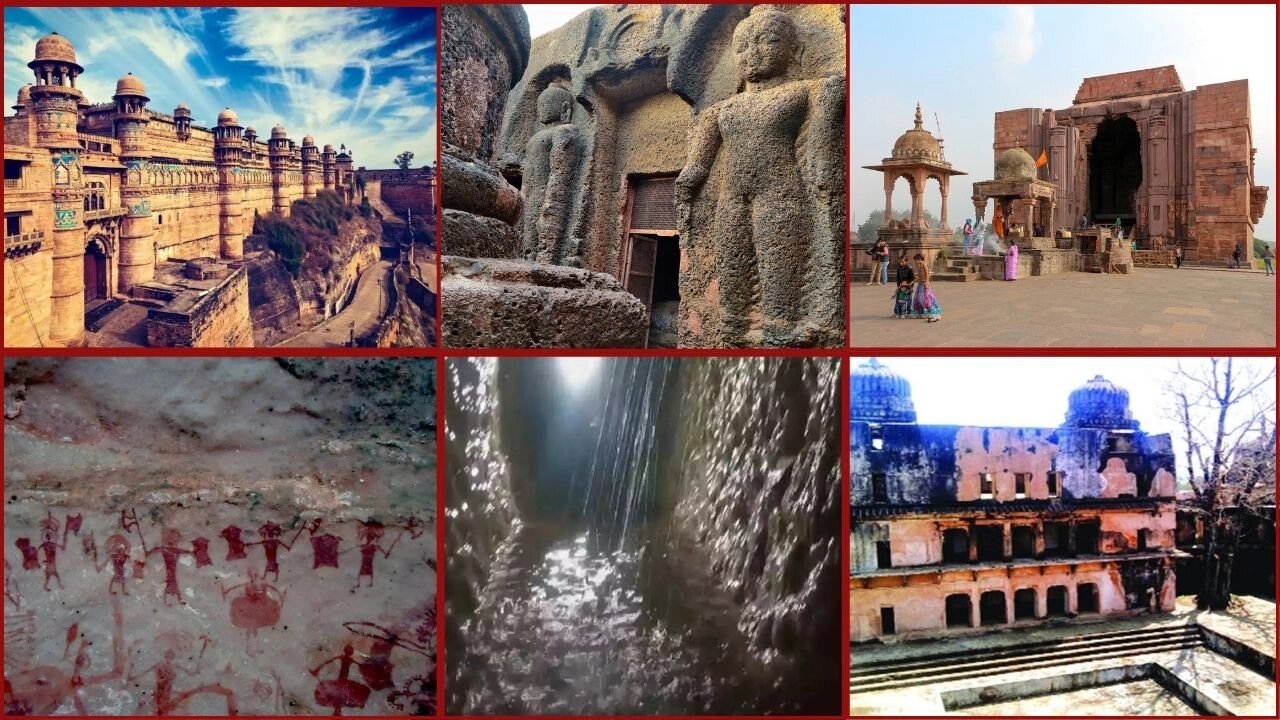
- 20 Mar 2024
Why is it in the News?
In a significant boost to its rich cultural and historical legacy, 6 new sites from Madhya Pradesh have found a place in the tentative UNESCO list of World Heritage Sites (WHS).
Six New Sites From MP In the UNESCO Tentative List:
- The sites included in the tentative list are Gwalior Fort, the Historical Group of Dhamnar, Bhojeshwar Mahadev Temple, Rock Art Sites of Chambal Valley, Khooni Bhandara, Burhanpur, and God Memorial of Ramnagar, Mandla.
- The UNESCO tentative list includes those that provide a forecast of the properties that a State Party may decide to submit for inscription in the next five to ten years.
- Gwalior Fort: An imposing fortress atop a hill, featuring impenetrable walls, exquisite sculptures, and stunning architecture.
- Built-in the 6th century AD by Rajput warrior Suraj Sen and expanded by Tomar ruler Maan Singh in 1398.
- Dhamnar Caves: Rock-cut temple site in Mandsaur district, constructed in the 7th century AD.
- It comprises 51 caves, stupas, chaityas, and dwellings, with a colossal Gautam Buddha statue.
- Bhojeshwar Mahadev Temple: Located near Bhopal, this temple is dedicated to Lord Shiva, with a huge Linga carved from a single stone.
- Built between 1010 and 1053 AD by Raja Bhoj but was never completed.
- Chambal Valley Rock Art Sites: The world's largest concentration of rock art sites across MP, Rajasthan, and Uttar Pradesh, depicting ancient daily life, rituals, and hunting scenes.
- Khooni Bhandara: A unique water supply system built in Burhanpur in 1615 by ruler Abdurrahim Khankhana, still operational today.
- Gond Statue, Mandla: Moti Mahal, a five-storied palace built in Mandla in 1667 by Gond king Hriday Shah, showcasing the strong willpower of the king despite limited resources.
What is UNESCO’s Tentative List?
- A World Heritage Site is a site with outstanding universal value.
- It also denotes cultural and natural significance that transcends national boundaries and is of common importance for current and future generations of all humanity.
- According to UNESCO, a tentative list lists the properties each State Party intends to consider for nomination.
- The government of any nation must have a nomination document ready for the UNESCO World Heritage Committee to review once as soon as UNESCO includes it in a location on the Tentative List.
- After this, a UNESCO representative will evaluate the situation and inspect it.
What is the Tentative List Process?
- The States Parties are encouraged to submit their Tentative Lists of properties that they consider cultural and natural heritage of outstanding universal value and, therefore, suitable for inscription on the World Heritage List.
- The States Parties are encouraged to prepare their Tentative Lists with the participation of stakeholders such as site managers, local and regional governments, local communities, NGOs, and other interested parties and partners.
- The States Parties should submit the Tentative Lists to the World Heritage Centre at least one year before submitting any nomination.
- The list should not be exhaustive.
- The States Parties can re-examine and re-submit their list at least every ten years.
- The States Parties are also requested to submit their lists using a submission format (English or French) that should contain the name of the properties, geographical location, a brief description of the properties, and why the property is of outstanding universal value.
- Nomination will only be considered once the property is added to the State Party's Tentative List.
State of Global Climate Report 2023
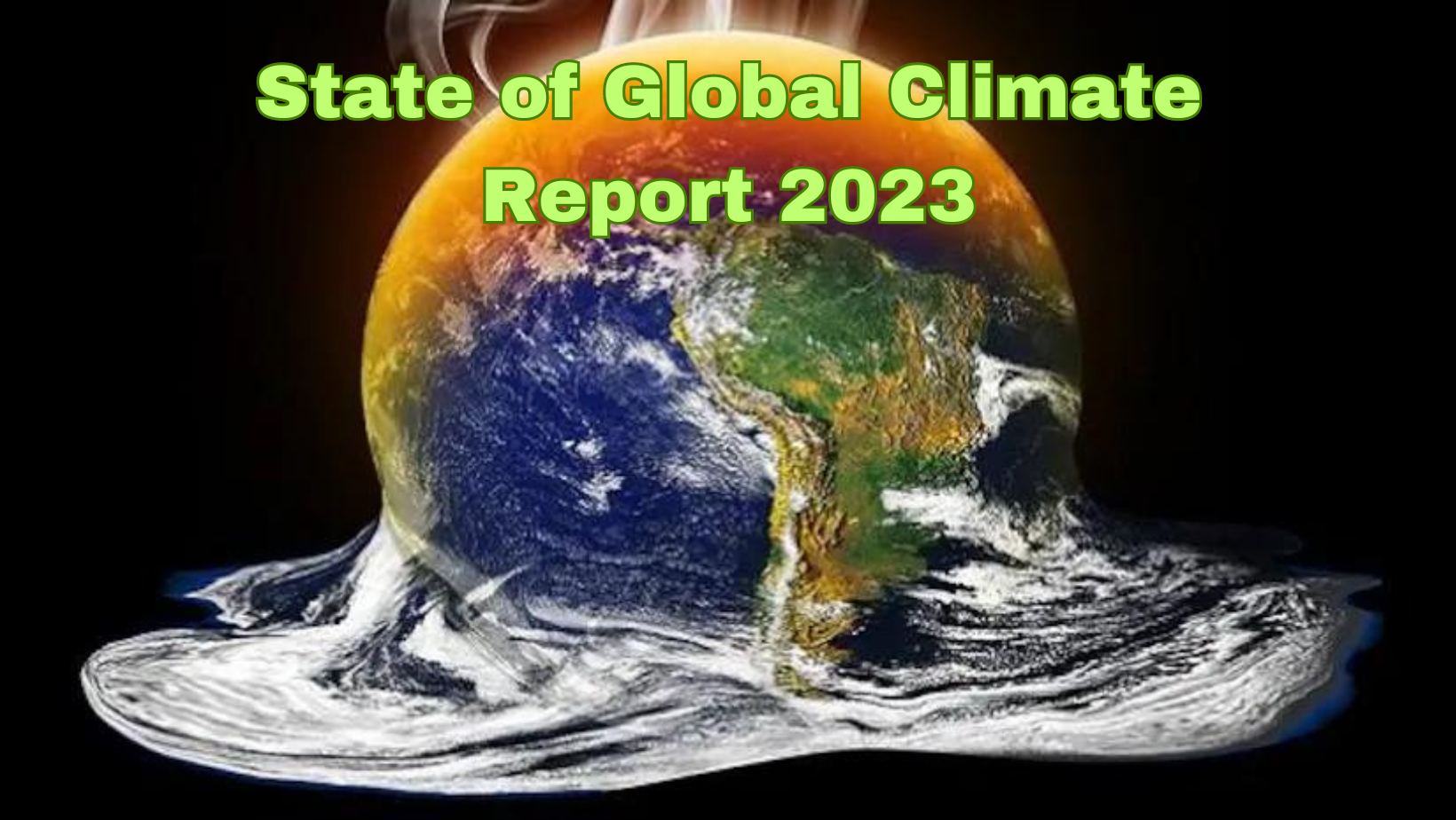
- 20 Mar 2024
Why is it in the News?
In line with a host of observations by climate agencies in the preceding three months, the World Meteorological Organisation (WMO) has officially confirmed 2023 to be the hottest year on record.
About the State of Global Climate Report 2023:
- Published annually by the World Meteorological Organization (WMO), the State of Global Climate Report provides a detailed analysis of the Earth's climate system.
- Contributors to the report include various UN organizations, National Meteorological and Hydrological Services, Global Data and Analysis Centers, Regional Climate Centres, the World Climate Research Programme (WCRP), and more.
Highlights of the 2023 Report:
- Record-Breaking Global Temperatures: 2023 was the hottest year on record, with a global average near-surface temperature of 1.45°Celsius (±0.12°C) above the pre-industrial baseline.
- The past ten years were also the warmest decade recorded.
- Extensive Marine Heatwaves: Nearly one-third of the global ocean experienced a marine heatwave on an average day in 2023.
- Over 90% of the ocean had faced heatwave conditions at some point during the year, negatively impacting ecosystems and food systems.
- Unprecedented Glacier Ice Loss: Preliminary data reveals the largest loss of ice since 1950 for the global set of reference glaciers, driven by extreme melt in western North America and Europe.
- Surge in Renewable Energy Capacity: Renewable capacity additions in 2023 increased by almost 50% from 2022, totaling 510 gigawatts (GW) and marking the highest rate in the past two decades.
- These findings emphasize the pressing need to address climate change through effective international cooperation, policymaking, and sustainable practices.
About the World Meteorological Organisation (WMO):
- The World Meteorological Organization (WMO) is a specialized agency of the United Nations that fosters international cooperation in atmospheric science, climatology, hydrology, and geophysics.
- Founded in 1950, WMO originated from the International Meteorological Organization established in 1873 to facilitate the exchange of weather data and research.
- Today, WMO comprises 193 member countries and territories and promotes the free exchange of meteorological and hydrological data, information, and research.
- By collaborating with various partners, WMO contributes to environmental protection, climate change mitigation, and sustainable development efforts worldwide.
- Headquarters: Geneva, Switzerland.
Small-Scale LNG (SSLNG)

- 20 Mar 2024
Why is it in the News?
India's largest gas utility GAIL (India) Ltd commissioned the country's first SSLNG unit at its Vijaipur complex in Madhya Pradesh recently.
India Unveils Its First Small-Scale LNG Plant:
- In a significant step towards a cleaner energy mix, GAIL (India) Ltd. has commissioned India's first Small-Scale LNG (SSLNG) plant in Vijaipur, Madhya Pradesh.
- This plant will produce 36 tonnes of Liquefied Natural Gas (LNG) daily, utilizing cutting-edge technology like treatment skids and liquefaction skids to convert natural gas into LNG.
- As part of India's commitment to increasing the proportion of natural gas in its primary energy mix from 6% to 15% by 2030, the SSLNG plant will play a pivotal role in reducing pollution emissions while catering to the nation's growing energy demands.
- This milestone achievement paves the way for a greener future and positions India as a significant player in the global LNG landscape.
What is Small-Scale LNG?
- Small-scale LNG (SSLNG) is an emerging industry that offers a novel approach to natural gas distribution.
- While there is no standard international definition, SSLNG typically involves the liquefaction and transportation of natural gas in smaller quantities using specialized trucks and vessels.
- This allows for the supply of LNG to industrial and commercial consumers in regions without pipeline connectivity.
- SSLNG can be sourced from existing large-scale LNG import terminals or small liquefaction plants in gas-rich locations.
- End-users regasify the LNG using small vaporizers for traditional use cases like supplying Compressed Natural Gas (CNG) for vehicles and piped gas for households and industries.
- Alternatively, LNG can be supplied in its liquid form for direct use.
Benefits of Small-Scale LNG (SSLNG):
- Expanded Accessibility: SSLNG overcomes the constraints of traditional pipeline infrastructure, enabling natural gas delivery to regions previously lacking access.
- This opens new avenues for cleaner fuel alternatives and widespread energy availability.
- Operational Flexibility: SSLNG's modular design allows for rapid deployment in response to local demand fluctuations, making it an ideal solution for remote locations, industrial environments, and diverse transportation requirements.
- Sustainability Promotion: By fostering the adoption of cleaner fuels, SSLNG significantly reduces emissions in various transportation sectors, including trucks, buses, and marine vessels. This contributes to a greener future and combats climate change.
- Strengthened Energy Security: Decentralized SSLNG distribution systems diversify fuel sources and bolster energy security, ensuring reliable and stable energy supply amid global fluctuations and uncertainties.
Challenges of Small-Scale LNG (SSLNG) Implementation:
- Vehicle Availability Constraints: Limited options for LNG-powered vehicles impede the widespread adoption of LNG as a fuel source, underscoring the need for increased production and diversification of vehicle models.
- Insufficient Retail Infrastructure: The lack of a well-established LNG retail network hinders convenient consumer access to LNG fuel, emphasizing the importance of infrastructure expansion and enhancement.
- Higher Upfront Investment: The comparatively higher initial costs of LNG vehicles compared to traditional diesel options may deter potential buyers, necessitating innovative financial solutions and incentives.
- Financing Barriers: The absence of dedicated financing options for LNG vehicles poses obstacles for interested buyers, requiring tailored financial instruments to support SSLNG uptake.
- Restricted Pipeline Coverage: SSLNG faces logistical challenges in areas without existing natural gas pipeline networks, highlighting the need for infrastructure development to extend its reach to remote regions.
- Regulatory and Permitting Hurdles: SSLNG projects may encounter regulatory and permitting setbacks, including environmental and safety concerns, potentially prolonging project timelines and inflating costs.
- Addressing these challenges is essential for expediting SSLNG implementation and fostering its growth.
FSSAI Launches Comprehensive Lab Network for Pathogen Testing

- 20 Mar 2024
Why is it in the News?
With food poisoning and diarrhea becoming a common occurrence, the Food Safety and Standards Authority of India (FSSAI) is working towards creating a network of 34 microbiology labs across the country that will be equipped to test food products for 10 pathogens, including E coli, salmonella, and listeria.
About the Initiative:
- To address the growing concern of microbial contamination in food products, a network of 34 advanced microbiology laboratories has been established across the country.
- These state-of-the-art facilities are specifically designed to test and monitor a wide range of food products for the presence of harmful pathogens, including E. coli, salmonella, and listeria, among others.
- The nationwide initiative aims to strengthen the existing food safety framework by enhancing the early detection and prevention of foodborne illnesses.
- By analyzing food samples collected during routine surveillance, the labs will play a pivotal role in ensuring the safety and quality of consumable goods.
- With a focus on safeguarding public health and well-being, this collaborative effort will contribute significantly to the overall improvement of food security and foster greater confidence in the food industry.
- As the network continues to expand and evolve, it will undoubtedly become an essential asset in the ongoing battle against foodborne pathogens and contamination.
Need for the Initiative:
- India has witnessed a surge in food poisoning and diarrhea cases in recent years, emphasizing the critical need for improved food safety measures.
- According to data from the National Centre for Disease Control (NCDC), over 1,100 outbreaks of acute diarrhoeal disease and around 550 incidents of food poisoning occurred within the last four years.
- These troubling statistics underscore the urgency to address this pressing public health issue.
- State food safety laboratories, responsible for ensuring the safety of consumable products, currently lack the necessary resources and infrastructure to effectively identify and mitigate the presence of dangerous pathogens.
- The complexities of maintaining live reference samples, the high costs of reagents, and the requisite expertise of microbiologists pose significant challenges in maintaining optimal food safety standards.
- Consequently, the establishment of a comprehensive microbiology lab network becomes crucial in effectively addressing the growing threat of foodborne illnesses.
- By enhancing testing capabilities and promoting early detection, this initiative will ultimately contribute to a safer food supply, improved public health outcomes, and increased consumer confidence in the food industry.
About the Food Safety and Standards Authority of India (FSSAI):
- As an autonomous body under India's Ministry of Health and Family Welfare, the FSSAI was established in 2006 under the Food Safety and Standards Act.
- This act serves as a consolidating statute focusing on food safety and regulation in India.
- The FSSAI's mission is to set global standards for food, encourage adherence to these standards, promote good manufacturing and hygiene practices, and enable citizens' access to safe and nutritious food.
Key functions include:
-
- Protecting public health by regulating and supervising food safety.
- Setting standards and guidelines for food articles.
- Issuing licenses, registrations, and accreditations for food businesses.
- Controlling food imports to prevent harmful ingredients.
- Accrediting food testing laboratories nationwide.
- Overseeing food certification in India, including accreditation of certification systems and food safety management systems for food businesses.
- Through these efforts, the FSSAI plays a vital role in maintaining high food safety standards and safeguarding the well-being of India's citizens.
Reverse Flipping
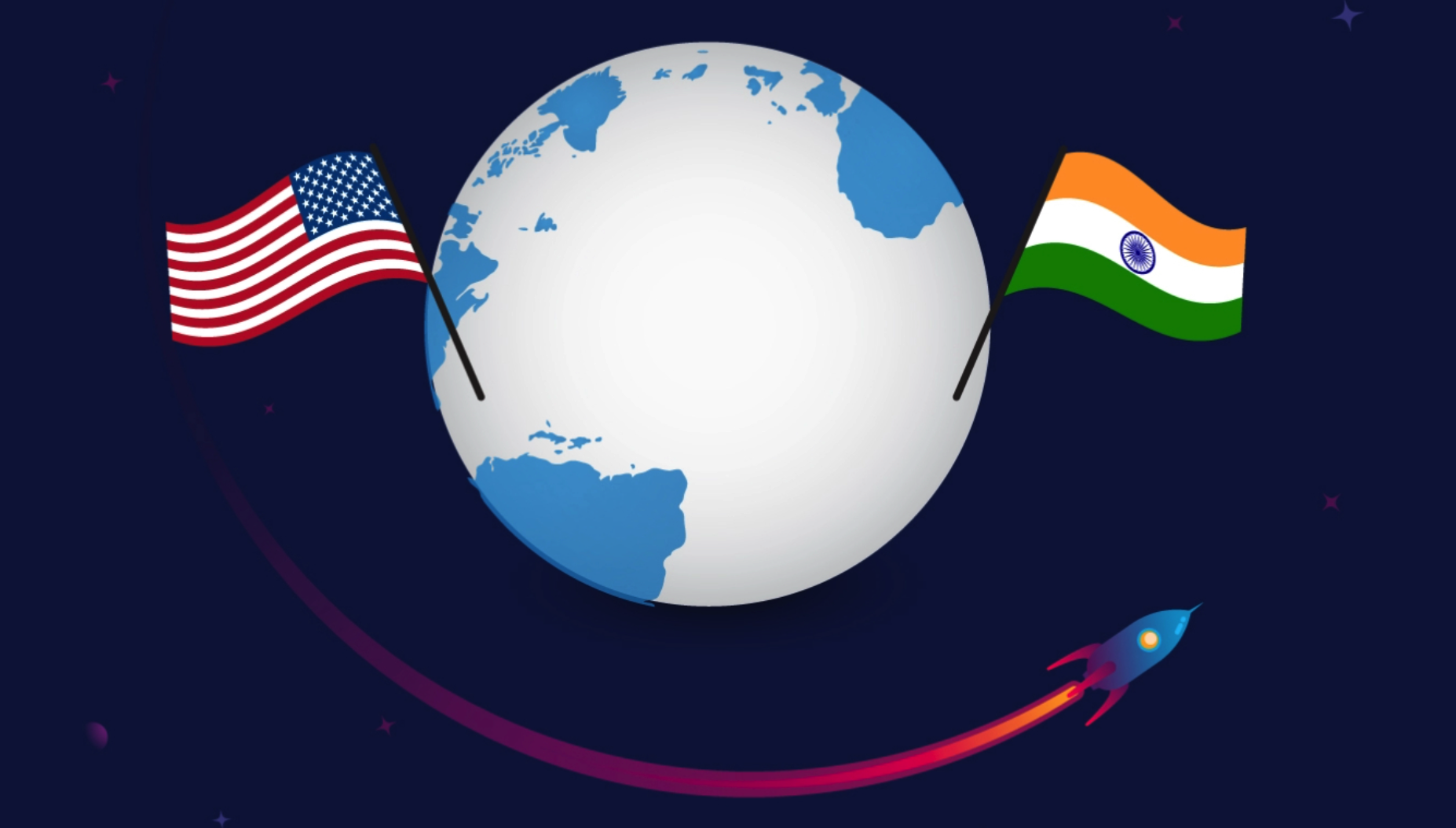
- 20 Mar 2024
Why is it in the News?
Payments major Pine Labs and quick commerce firm Zepto are among the startups looking to relocate their headquarters from foreign shores to India, to capitalize on the country's burgeoning tech landscape.
What is Reverse Flipping?
- Reverse flipping is a growing trend where overseas startups relocate their domicile to India and list on Indian stock exchanges.
- The primary motivation behind this shift is the potential for a higher valuation and more certain exit opportunities in India's thriving economic landscape.
Several factors contribute to the rise of reverse flipping:
- Access to a large, expanding economy: India's significant market size and sustained economic growth offer foreign startups attractive prospects for business expansion and success.
- Abundant venture capital: India's substantial venture capital resources provide a strong financial foundation for startups, fueling innovation and growth.
- Favorable tax policies: The country's tax regulations encourage foreign startups to establish operations in India, helping them maximize profits and minimize costs.
- Enhanced intellectual property protection: India's robust IP protection framework fosters innovation and creativity, safeguarding the unique ideas and technologies of startups.
- Skilled, youthful workforce: The availability of a talented, young, and educated population provides startups with a valuable human resource pool to drive growth and success.
- Supportive government policies: The Indian government actively promotes entrepreneurship and innovation through various initiatives and policies, creating a conducive environment for startups.
- The Economic Survey 2022-23 acknowledged the importance of reverse flipping and suggested measures to expedite the process, including simplifying tax vacation procedures, ESOP taxation, capital movement, and reducing tax layers.
- These efforts aim to further enhance India's appeal as a destination for foreign startups and foster economic growth.
What is Flipping?
- Flipping refers to the process by which an Indian company becomes a 100% subsidiary of a foreign entity after moving its headquarters overseas, involving a transfer of intellectual property (IP) and other assets.
- This transforms an Indian startup into a fully-owned subsidiary of a foreign entity, with founders and investors maintaining their ownership through the new overseas structure by exchanging their shares.
The process of flipping poses several concerns for India:
- The brain drain of entrepreneurial talent: As Indian startups move their operations overseas, India experiences a loss of innovative and entrepreneurial talent, which could otherwise contribute to the country's economic growth and development.
- Value creation in foreign jurisdictions: Flipping redirects potential value creation to foreign countries, depriving India of the economic benefits that could result from successful startups and innovations.
- Loss of Intellectual Property: When companies relocate and transfer their intellectual property overseas, India loses valuable IP assets, undermining the country's competitive advantage and innovation potential.
- Reduced tax revenue: Flipping also contributes to decreased tax revenue for India as companies shift their operations and profits to other jurisdictions, which may have more favorable tax policies.
Developing Countries Trading Scheme (DCTS)
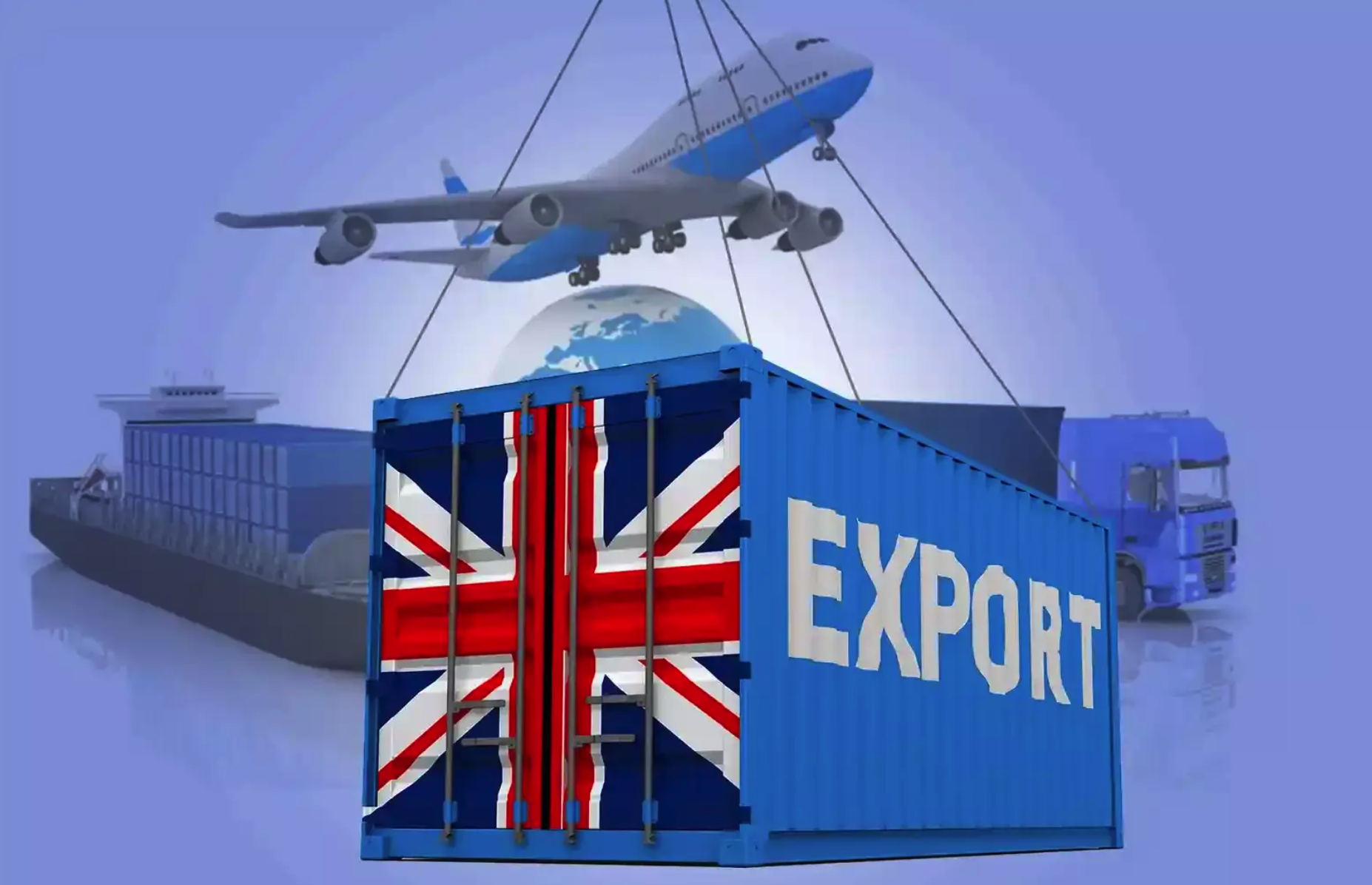
- 19 Mar 2024
Why is it in the News?
Exporters seeking to avail duty concessions on shipments to the UK will have to adhere to the new British rules under the Developing Countries Trading Scheme (DCTS).
What is the Developing Countries Trading Scheme (DCTS)?
- The Developing Countries Trading Scheme (DCTS) is a preferential trading scheme introduced by the United Kingdom to promote trade with developing countries and support their economic growth.
- The DCTS is designed to support sustainable growth in these countries through a more generous unilateral offer compared to the current Generalised Scheme of Preferences (GSP).
Key provisions of the DCTS include:
- Tariff Reduction: Lowering tariffs facilitates easier exportation of goods from developing countries to the UK market.
- Liberalized Rules of Origin: Simplifying rules of origin requirements streamlines trade between developing nations and the UK.
- Simplified Conditions: The scheme's conditions are simplified to facilitate easier access for developing nations.
- The DCTS extends to countries currently benefiting under the UK's GSP, encompassing 47 Least Developed Countries (LDCs) and 18 additional low-income (LIC) and lower-middle-income (LMIC) countries or territories identified by the World Bank.
- However, it excludes countries classified as upper-middle income by the World Bank for three consecutive years or those with a free trade agreement (FTA) with the UK.
- The UK government's policy response to the DCTS introduction is structured into four sections, addressing rules of origin, tariffs, goods graduation, and scheme conditions.
- Overall, the DCTS signifies the UK's commitment to bolstering trade opportunities and sustainable growth in developing countries by providing improved market access and favorable trade terms.
Significance For India:
- The Developing Countries Trading Scheme (DCTS) has significant implications for India, as it offers preferential access to the United Kingdom's market.
- India, being classified as a lower-middle-income country by the World Bank, is eligible to benefit from the DCTS.
- Trade opportunities: The scheme provides reduced or eliminated tariffs on various goods, making it easier for Indian exporters to access the UK market.
- This results in enhanced trade opportunities and increased competitiveness for Indian products.
- Economic growth: By improving access to a major global market, the DCTS can contribute to India's economic growth, creating jobs and boosting the country's export sector.
- Diversification: The scheme encourages Indian businesses to diversify their export portfolio, helping to reduce reliance on specific sectors or trading partners.
- Sustainable development: Through its focus on promoting sustainable development and economic growth in participating countries, the DCTS aligns with India's own goals to foster inclusive and sustainable economic progress.
Overall, the DCTS presents a positive outlook for trade between India and the UK. It offers Indian exporters improved access to the UK market, reduced trade barriers, and a conducive environment for sustainable growth. India can leverage the opportunities provided by the DCTS to strengthen its trade relationship with the UK and potentially increase its exports, benefiting its economy and the livelihoods of its people.
Haemodialysis
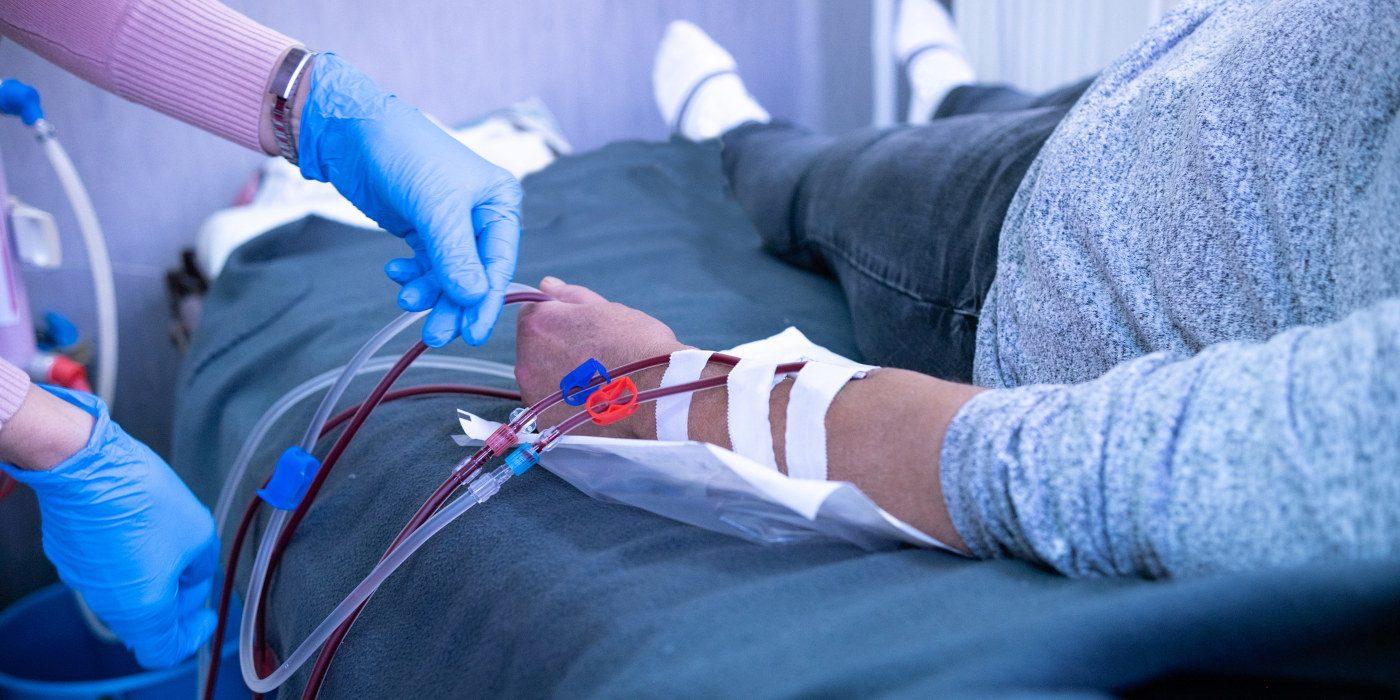
- 19 Mar 2024
Why is it in the News?
Findings from a nationwide private hemodialysis network show that there is a variation in the survival of patients receiving hemodialysis in India depending on various factors, and stress on the need to standardize dialysis care across centers.
What is Hemodialysis?
- Haemodialysis, also known as dialysis, is a medical procedure that helps individuals with kidney failure by removing waste products and excess fluid from their blood.
- This procedure essentially performs the functions of the kidneys, which are responsible for filtering waste and maintaining the body's electrolyte balance.
Key points about hemodialysis:
- Process: During hemodialysis, a patient's blood is circulated through a machine with a semipermeable membrane, called a dialyzer or an artificial kidney.
- The dialyzer filters out waste products, such as urea and creatinine, and excess fluid from the blood, which is then discarded, while essential components are returned to the patient's bloodstream.
- Access: To perform hemodialysis, a patient typically requires vascular access, which is a surgically created connection between an artery and a vein, usually in the arm.
- This connection allows for the efficient flow of blood from the patient to the dialysis machine and back.
- Duration: Haemodialysis treatment typically lasts for around 3-5 hours and is performed several times per week, depending on the patient's needs and kidney function.
- Indications: Haemodialysis is prescribed for patients with end-stage kidney failure, also known as end-stage renal disease (ESRD), who need immediate intervention while waiting for a kidney transplant or when a transplant is not a suitable option.
- Side effects: Some common side effects of hemodialysis include low blood pressure, muscle cramps, itching, and fatigue.
- Complications such as infection, access problems, and blood clotting may also occur, but these risks can be minimized with proper medical supervision and management.
- In summary, hemodialysis is a life-sustaining treatment for patients with kidney failure, offering a means to maintain their health and well-being despite the loss of kidney function.
SAKHI App To Assist Gaganyaan Crew

- 19 Mar 2024
Why is it in the News?
The Vikram Sarabhai Space Centre (VSSC), the Indian Space Research Organisation (ISRO) facility at Thumba in Thiruvananthapuram, has developed a multi-purpose app that will help astronauts on the Gaganyaan space flight mission carry out a range of tasks such as looking up vital technical information or communicating with one another.
About SAKHI App:
- The Vikram Sarabhai Space Centre (VSSC), an ISRO facility in Thumba, Thiruvananthapuram, has created the versatile 'SAKHI' app for astronauts on the Gaganyaan space flight mission.
- SAKHI stands for 'Space-borne Assistant and Knowledge Hub for Crew Interaction'.
Purpose:
- During the mission, the app will assist Gaganyaan crew members in various tasks such as accessing vital technical information and communicating with each other.
Utility:
- Health Monitoring: It will monitor key health parameters like blood pressure, heart rate, and oxygen saturation, providing crucial insights into the crew's physical condition during the mission.
- Additionally, it will remind them of hydration, dietary schedules, and sleep patterns.
- Connectivity:
- Astronauts can use the app to maintain mission logs in various formats, including voice recordings, texts, and images.
- It will ensure seamless communication between the crew, the onboard computer, and ground-based stations.
- Current Status: An engineering model of the custom-built hand-held smart device featuring SAKHI has been tested, with the development of a flight model underway.
About the Gaganyaan Mission:
- The primary objective of the mission is to demonstrate the capability to launch and safely return three crew members to low Earth orbit.
- The Launch Vehicle Mark-3 (LVM3) is designated as the launch vehicle for the Gaganyaan mission.
- Crew Escape System (CES): A vital component of the mission, CES is powered by quick-acting, high-burn rate solid motors.
- It ensures the safe evacuation of the Crew Module and crew in case of emergencies during launch or ascent.
- Orbital Module: Comprising the Crew Module (CM) and Service Module (SM), the Orbital Module orbits the Earth, providing safety and support throughout the mission phases.
- Crew Module (CM): Designed to offer a habitable space with Earth-like conditions for the crew during their time in space.
- Service Module (SM): This module supports the CM during orbit, containing essential systems such as thermal, propulsion, power, avionics, and deployment mechanisms.
- This will mark ISRO's inaugural manned spaceflight mission, joining the ranks of the US, Russia, and China, which have previously conducted human spaceflights.
Nilgiris Forest Fire
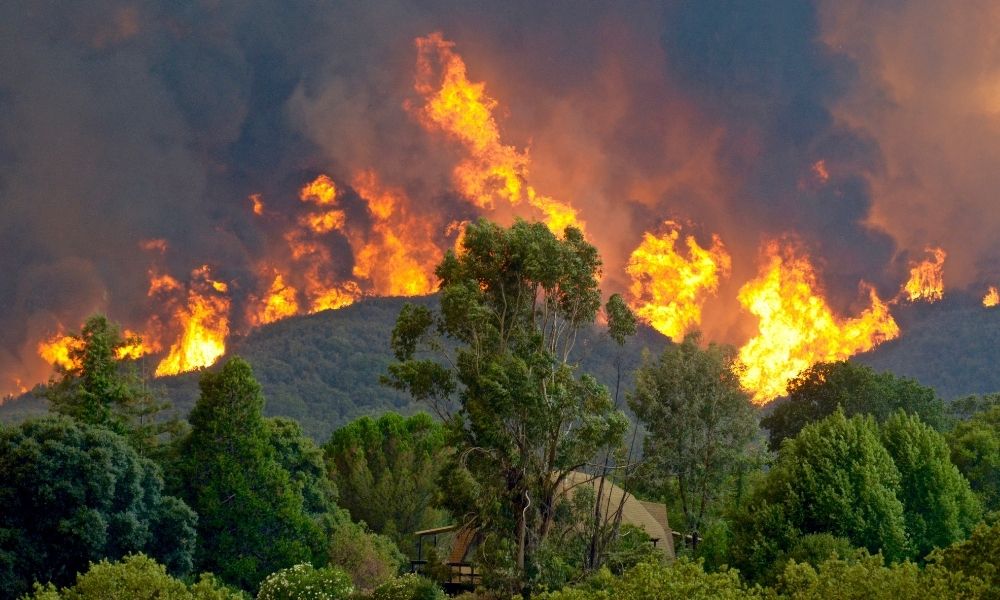
- 19 Mar 2024
Why is it in the News?
The Indian Air Force (IAF) has deployed its assets to aid the local administration in dousing the raging forest fire that started recently in Tamil Nadu's Nilgiris district.
What is a Forest Fire?
- A forest fire, also known as a wildfire, is an uncontrolled fire that occurs in forested areas or other vegetated landscapes.
- These fires can spread rapidly, fueled by dry vegetation, high temperatures, low humidity, and strong winds.
- Once ignited, they can quickly grow in size, consuming vast areas of land, vegetation, and wildlife habitat.
- Wildfires pose significant risks to human safety, property, ecosystems, and air quality.
Causes of Forest Fire:
- Forest fires are caused by Natural causes as well as man-made causes.
- Natural causes: Many forest fires start from natural causes such as lightning which sets trees on fire.
- However, rain extinguishes such fires without causing much damage. High atmospheric temperatures and dryness (low humidity) offer favorable circumstances for a fire to start.
- Man-made causes: Fire is caused when a source of fire like naked flame, cigarette or bidi, electric spark, or any source of ignition comes into contact with inflammable material.
- Natural causes: Many forest fires start from natural causes such as lightning which sets trees on fire.
Types of forest fire:
- Surface Fire: This type of forest fire spreads primarily along the ground, consuming surface litter such as dry leaves, twigs, and grasses.
- The flames engulf the forest floor as they advance.
- Underground Fire: Underground fires, also known as muck fires, burn with low intensity beneath the surface, consuming organic matter and surface litter.
- These fires often spread slowly and can continue burning for months, destroying vegetative cover.
- Ground Fire: Ground fires occur in sub-surface organic fuels such as duff layers under forest stands or organic soils of swamps.
- They burn herbaceous growth and organic matter beneath the surface, often transitioning from smoldering underground fires.
- Crown Fire: Crown fires involve the burning of the crowns of trees and shrubs, sustained by a surface fire.
- They are particularly hazardous in coniferous forests, where resinous material can fuel intense flames.
Frequency of Forest Fire in India:
- Seasonality: Forest fires in India are prevalent from November to June, with peak activity typically occurring in April and May, encompassing both small-scale and large-scale incidents.
- Vulnerability: The 2019 India State of Forest Report (ISFR) highlighted that over 36% of the country's forest cover is susceptible to frequent fires, with 4% categorized as extremely prone and an additional 6% as highly fire-prone.
- Affected Regions: Dry deciduous forests experience severe fires, with Northeast India, Odisha, Maharashtra, Jharkhand, Chhattisgarh, and Uttarakhand being particularly vulnerable areas.
- Recent Incidents: Notable fire outbreaks occurred in 2021 across Uttarakhand, Himachal Pradesh, Nagaland-Manipur border, Odisha, Madhya Pradesh, and Gujarat, including wildlife sanctuaries.
- In 2023, Goa faced large bushfires under investigation for potential human causes.
- 2024 Trends: Recent reports indicate heightened fire activity in Mizoram, Manipur, Assam, Meghalaya, and Maharashtra, with increased incidents along the Konkan belt, coastal Gujarat, southern Rajasthan, Madhya Pradesh, coastal Odisha, Jharkhand, Andhra Pradesh, Karnataka, and Tamil Nadu.
- Southern India: While Andhra Pradesh and Telangana witness fire incidents, forests in southern India, primarily evergreen or semi-evergreen, are less prone to fires, although Tamil Nadu has experienced recent wildfires.
Reasons Behind This Year's Fires:
- Climate Factors: Dry conditions, high temperatures, clear skies, and light winds have fueled forest fires in southern India.
- Temperature Trends: February 2024 was exceptionally hot, making it the hottest month in southern India since 1901.
- Heat Accumulation: Above-average temperatures over the past months led to a buildup of heat, drying out biomass in forests ahead of the summer season.
- Excess Heat Factor: Western Andhra Pradesh and Karnataka are experiencing higher-than-normal EHF values, increasing the risk of heat waves.
- Mild Aridity: Lack of rain and high temperatures have classified most districts in southern India as mildly arid.
World Air Quality Report 2023
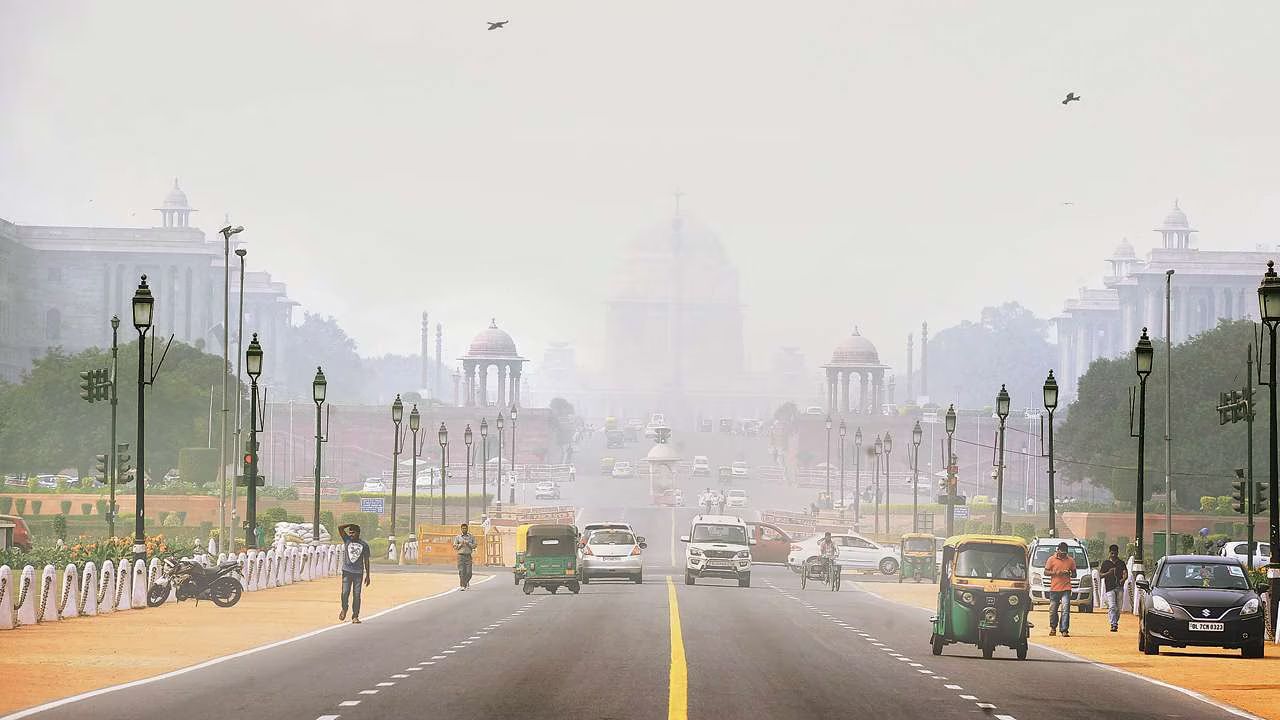
- 19 Mar 2024
Why is it in the News?
India had the third worst air quality out of 134 countries in 2023 after Bangladesh and Pakistan according to the World Air Quality Report 2023 by IQAir.
About World Air Quality Report 2023:
- The World Air Quality Report is an annual publication by IQAir, a Swiss air quality monitoring firm.
- The report provides an in-depth analysis of global air quality, shedding light on the impact of air pollution on human health and the environment.
Key highlights from the report include:
- India ranks third in poor air quality: With an average annual particulate matter 2.5 (PM2.5) concentration of 54.4 micrograms per cubic meter, India trails only Bangladesh and Pakistan in terms of poor air quality.
- South Asian dominance in pollution rankings: Bangladesh and Pakistan occupy the top two positions in the air pollution rankings, while ten out of the eleven most polluted cities in the world are in India.
- Delhi's alarming status: For the fourth consecutive year, Delhi has been identified as the world's most polluted capital city.
- Additionally, Bihar's Begusarai has been termed the world's most polluted metropolitan area.
- India's widespread exposure: An overwhelming 96% of the Indian population experiences PM2.5 levels more than seven times the WHO annual PM2.5 guideline, emphasizing the need for urgent interventions to mitigate the health impacts of air pollution.
What is Particulate Matter (PM)?
- Particulate Matter (PM) is a term used to describe a mixture of solid particles and liquid droplets found in the air.
- These particles can be made up of various components such as dust, dirt, soot, smoke, and organic chemicals.
- They are classified based on their size, with PM2.5 and PM10 being the most commonly referenced categories.
- PM2.5 refers to fine particulate matter with a diameter of 2.5 micrometers or less, which is about 30 times smaller than the width of a human hair.
- These particles are produced by various sources such as vehicle emissions, industrial processes, and wildfires.
- Due to their small size, they can penetrate deep into the lungs and even enter the bloodstream, posing significant health risks.
- PM10, on the other hand, refers to coarse particulate matter with a diameter of 10 micrometers or less.
- These particles are larger and primarily originate from activities such as construction, road dust, and agricultural practices.
- While not as harmful as PM2.5, they can still enter the respiratory system and cause health problems.
Equity Issues in IPCC Reports
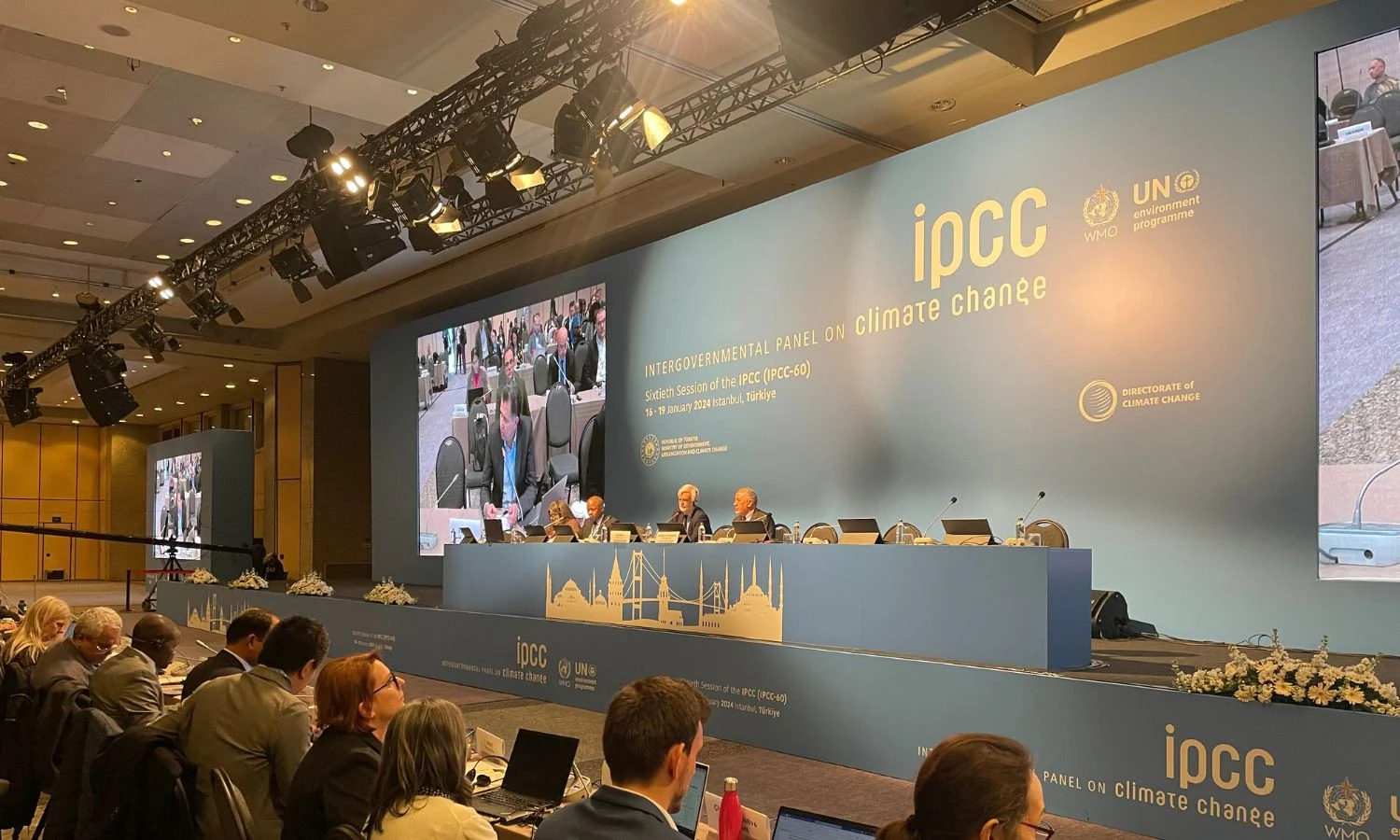
- 18 Mar 2024
Why is it in the News?
In a study published recently, researchers analyzed more than 500 future emissions scenarios the UN Intergovernmental Panel on Climate Change (IPCC) assessed in its latest reports.
About the Intergovernmental Panel on Climate Change (IPCC):
- The IPCC was created in 1988 by the World Meteorological Organization (WMO) and the United Nations Environment Programme (UNEP).
- It is the leading international body for the assessment of climate change.
- It is a key source of scientific information and technical guidance to the United Nations Framework Convention on Climate Change (UNFCCC) and the Paris Agreement.
- The IPCC provides governments with scientific information for use in developing climate policies.
- The IPCC currently has 195 members.
- The IPCC does not undertake new research. Instead, it synthesizes published and peer-reviewed literature to develop a comprehensive assessment of scientific understanding.
- These assessments are published in IPCC reports.
- They are subject to multiple drafting and review processes to promote an objective, comprehensive, and transparent assessment of current knowledge.
- The IPCC’s work is guided by principles and procedures that govern all main activities of the organization.
- IPCC member governments and observer organizations nominate experts and the IPCC's scientific governing body, the IPCC Bureau, selects authors and editors with expertise in a range of scientific, technical, and socio-economic fields.
What are IPCC Assessment Reports?
- Typically, IPCC reports comprise three Working Group reports:
- One on physical science
- One on climate adaptation, and
- One on mitigation action.
- One synthesis report consolidates findings from the three Working Group reports.
- Then there are thematic special reports.
- Each report assesses climate-related scientific literature to capture the state of scientific, technical, and socio-economic knowledge on climate change.
- The IPCC is currently in its Seventh Assessment cycle (AR7).
How Does it Assess Future Scenarios?
- The IPCC uses ‘modelled pathways’ to estimate what it will take to limit the warming of the earth’s surface.
- These pathways are drawn using Integrated Assessment Models (IAMs) that describe human and earth systems.
- IAMs are complex models that examine possible futures of the energy and climate systems and economies.
- Its macroeconomic models can point to future growth levels in terms of GDP;
- Its energy models can project future consumption
- Vegetation models can examine land-use changes; and
- Earth-system models use the laws of physics to understand how climate evolves.
- With such integration across disciplines, IAMs are meant to provide policy-relevant guidelines on climate action.
- However, these models also have shortcomings. They prioritize least-cost assessments — for example, the absolute cost of setting up a solar plant or undertaking afforestation in India is lower than in the U.S.
- However, experts have said they could exercise the option of enabling countries to equitably share the burden of action, where the richest undertake more drastic mitigation action more immediately.
About the Latest Study:
- Conducted by a team of specialists from Bengaluru and Chennai, the study scrutinized 556 scenarios outlined in the IPCC's AR6 report.
- Their findings indicate that by 2050, per-capita GDP in Sub-Saharan Africa, South Asia, West Asia, and other parts of Asia will remain below the global average.
- Collectively, these regions account for 60% of the global population.
- Additionally, the study highlighted disparities in the consumption of goods and services, as well as energy and fossil fuel consumption, between the Global North and the Global South.
Why Does Equity Matter?
- Equity is crucial in climate action as per the UNFCCC, which mandates developed nations to lead in combating climate change.
- However, current modeling approaches often overlook equity, burdening poorer nations disproportionately.
- Researchers highlight the need for modeling techniques that prioritize climate justice and equitable distribution of responsibilities.
- They argue that mitigation pathways should ensure developed regions accelerate towards net negative emissions and allocate carbon budgets to less developed regions.
- Addressing this gap requires a paradigm shift in scenario building, emphasizing both equity and environmental sustainability.
- This approach is vital for fostering global cooperation and achieving meaningful climate action.
Lisu and Singpho Communities
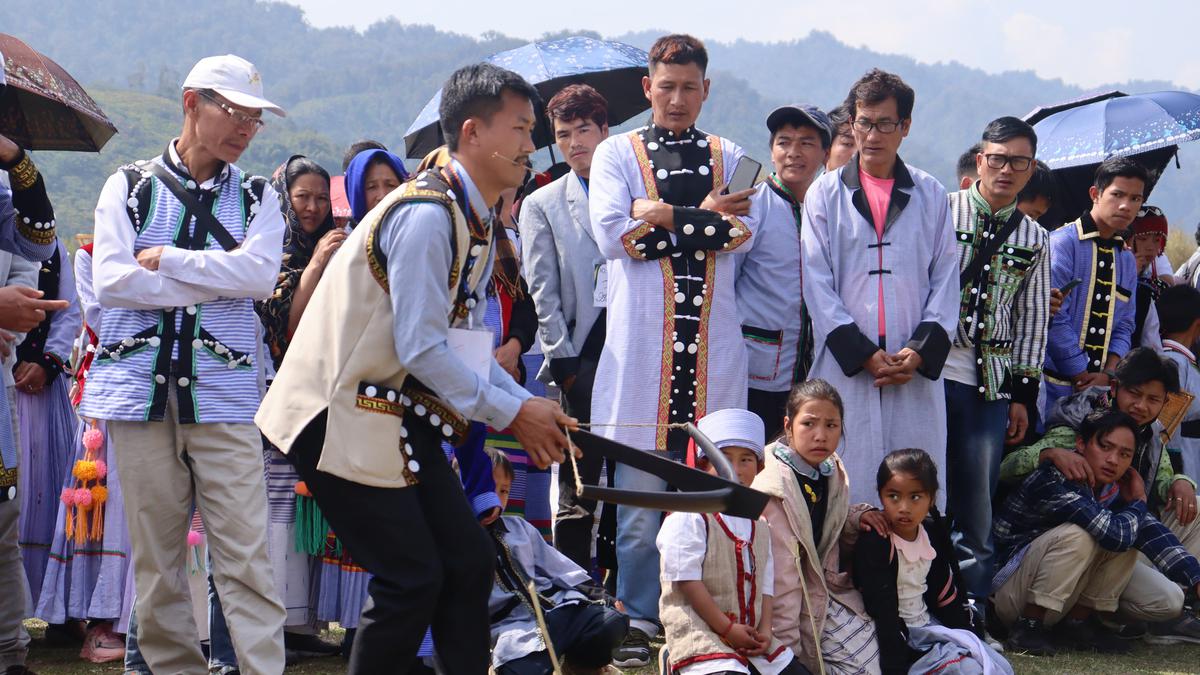
- 18 Mar 2024
Why is it in the News?
Children of the Lisu and Singpho communities in Arunachal Pradesh and Assam are named according to the order they are born in the family, incorporating numbers into their names.
News Summary:
- In the Lisu or Yobin community of Arunachal Pradesh, names reflect the birth order of children, a tradition emphasizing familial hierarchy and cultural heritage.
- This practice underscores the community's deep-rooted connection to family and tradition.
- Recently, Birdwatchers discovered a new species of wren babblers in remote northeastern Arunachal Pradesh, aptly named the Lisu wren babbler.
Lisu and Singpho communities:
- The Lisu and Singpho communities, belonging to the Tibeto-Burman ethnic family, share a unique tradition of employing numbered names to denote birth order within their families, serving as a testament to their ethnic cohesion and rich cultural legacy.
- This naming tradition is prevalent among the Lisus, spanning regions such as Arunachal Pradesh, China, Myanmar, and Thailand, as well as the Singphos, who are prominent in Arunachal Pradesh and Assam in India.
- The Singphos, an ethnic community believed to have originated from the Kachin peoples, migrated from regions including upper Myanmar, Southwestern China, and Northern Thailand to settle in the eastern areas of Arunachal Pradesh.
- Both communities adhere to specific naming sequences for boys and girls, supplemented by strategies to prevent confusion in cases of similar name counts within families, such as the use of prefixes or suffixes.
- Furthermore, names may incorporate clan or ancestral references, adding layers of cultural and familial significance to the naming tradition, which underscores the profound connection to tradition and the enduring importance of family and clan identities within these communities.
About Wren Babblers:
- Belonging to the babbler family Timaliidae, Wren Babblers encompass approximately 20 small Asian bird species.
- Characteristics: These birds typically measure between 10 to 15 centimeters (4 to 6 inches) in length, featuring short tails and straight bills.
- Natural Habitat: Primarily found in southern Asia, Wren Babblers inhabit various ecological niches.
- Grey-bellied Wren Babblers: A closely resembling species to this newly discovered one, predominantly inhabit regions of Myanmar, with smaller populations also found in China and Thailand.
Revenue-Based Financing
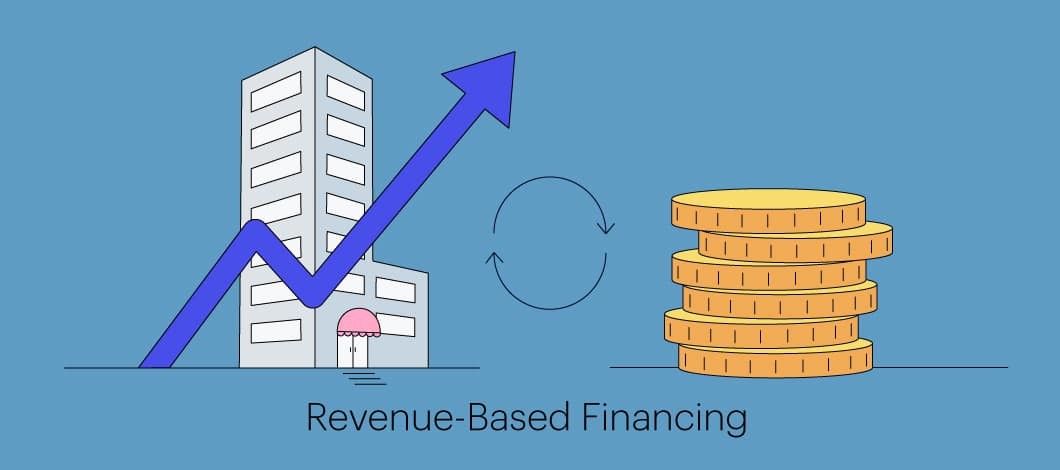
- 18 Mar 2024
Why is it in the News?
Revenue-based financing (RBF) is increasingly popular among startups and digital SMEs due to a lack of venture capital and limited access to traditional credit options.
What Is Revenue-Based Financing?
- Revenue-based financing is a method of raising capital for a business from investors who receive a percentage of the enterprise's ongoing gross revenues in exchange for the money they invested.
- In a revenue-based financing investment, investors receive a regular share of the business's income until a predetermined amount has been paid.
- Typically, this predetermined amount is a multiple of the principal investment and usually ranges between three to five times the original amount invested.
How Revenue-Based Financing Works?
- Capital investment: An investor or a group of investors provides capital to a company (but not as a traditional loan nor in exchange for equity in the company).
- Revenue percentage agreement: In return for the capital, the company agrees to give the investor a fixed percentage of its gross revenues each month.
- Repayment structure: The company repays the invested capital through payments based on monthly or annual revenue.
- The amount paid each month varies as it is directly tied to the company’s revenue for that month.
- Repayment cap or term: There is usually a cap on the total amount to be repaid, often set as a multiple of the original investment (e.g., 1.5x or 2x the initial amount).
- Alternatively, the repayment might continue until a specific term is reached, such as a number of years.
Comparing Revenue-based Financing to Debt and Equity-based Models:
- While revenue-based financing shares similarities with debt financing in terms of regular investor repayments, it differs notably as it doesn't involve interest payments.
- Instead, repayments are based on a predetermined multiple, yielding returns higher than the initial investment.
- Moreover, unlike traditional debt arrangements, revenue-based financing doesn't necessitate collateral.
- Additionally, unlike equity-based models, it doesn't entail transferring ownership stakes in the company to investors.
Chausath Khamba
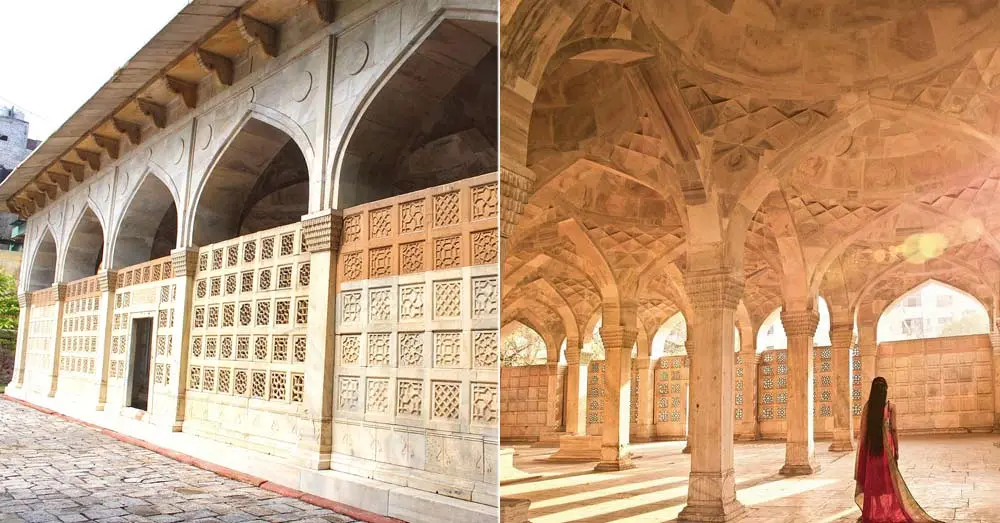
- 18 Mar 2024
Why is it in the News?
Characterized by its marble pillars and intricate latticework, Chausath Khamba (64 pillars) stands adjacent to the Nizamuddin dargah, a 14th-century shrine erected in honor of the revered Sufi saint Hazrat Nizamuddin Auliya.
About the Chausath Khamba:
- Chausath Khamba was built in AD 1623 - 24 to serve as a tomb for Mirza Aziz Koka, the foster brother of Mughal Emperor Akbar.
- It is so called on account of the 64 (chausath) monolithic marble pillars (khamba) and stands close to his father, Atgah Khan’s tomb, at the edge of the Dargah of Hazrat Nizamuddin Auliya.
- The tomb enclosure is entered through a lofty arched gateway and has a large sunken forecourt.
- The mausoleum is unique on account of it being built entirely of marble, with 25 marble domes supporting the flat roof of the structure.
- The plan for Chausath Khamba could have been inspired by the wooden garden pavilions from Persia - such as the Chihil Sutun, and in turn, the Chausath Khamba seems to have inspired the architectural design for Emperor Shahjahan’s Diwan-i-Aam, Hall of Audience.
- Each facade of the square structure has five marble arches inset with marble jaallis or lattice screens and a doorway in the central arch providing access to the tomb.
- The column capitals are intricately carved with simple yet striking pendentives bridging the square floor plan to the circular dome above.
- The structure also finds mention in Sir Gordon Risley Hearn’s book The Seven Cities of Delhi.
- As per author and historian Sam Dalrymple, the edifice embodies the architectural style of Gujarat and Ahmedabad within Delhi, serving as the Urs Mahal for hosting festivities during the commemoration of Nizamuddin's passing.
- This illustrates the historical dissemination of regional architectural influences across India over centuries.
Predictive AI: Its Applications and Advantages

- 18 Mar 2024
Why is it in the News?
Predictive AI is revolutionizing data analysis, decision-making, and industry leadership, offering businesses unprecedented insights and strategic advantages.
What is Predictive Artificial Intelligence (AI)?
- Predictive artificial intelligence (AI) utilizes machine learning techniques to analyze historical data and forecast future events, distinguishing it from traditional AI focused solely on retrospective analysis.
- This cutting-edge technology employs advanced algorithms and machine learning models to sift through extensive datasets, identifying subtle patterns and trends.
- Unlike conventional approaches, Predictive AI doesn't just analyze data; it transforms it into actionable insights, enabling organizations to:
- Anticipate future outcomes,
- Predict market shifts, and
- Make strategic decisions with unprecedented foresight.
- By continuously learning from past data and adapting to changing trends, Predictive AI becomes an invaluable tool, guiding businesses through uncertain landscapes.
How Predictive AI Work?
- Leveraging Big Data: Predictive AI relies on access to extensive datasets, often referred to as "big data," as larger datasets typically lead to more accurate analyses.
- Utilizing Machine Learning (ML): As a subset of AI, ML involves training computer programs to analyze data autonomously, without human intervention.
- In the realm of predictive AI, ML algorithms are applied to vast datasets to extract valuable insights.
- Autonomous Processing: Predictive AI models are capable of autonomously processing massive datasets, eliminating the need for human oversight.
- Pattern Recognition: Through ML techniques, predictive AI learns to recognize patterns within datasets, associating specific data points or occurrences with potential future events.
- By examining numerous factors, predictive AI can identify intricate patterns indicative of recurring events, enabling organizations to anticipate future outcomes effectively.
Difference Between Predictive AI and Generative AI:
- Predictive AI and generative AI both employ machine learning techniques and leverage extensive datasets to generate their outputs.
- However, while predictive AI utilizes machine learning to forecast future outcomes, generative AI employs machine learning to produce original content.
- For instance, a predictive AI model may inform fishermen about impending storms, whereas a generative AI model may craft a fictional narrative depicting various scenarios involving weather and fishing expeditions.
- While both types of AI rely on statistical analysis to discern patterns, their objectives, machine learning methodologies, and applications differ significantly.
Various Applications of Predictive AI:
- Assessing the Impact of Natural Disasters: With the recent eruption of a volcano in Iceland, the potential repercussions on air travel echo concerns from a similar event in 2010, which disrupted flights across Europe.
- Predictive AI leverages data analysis to identify patterns and anticipate the impact of such extreme weather events on air travel. Platforms like Yandex offer interactive maps for real-time monitoring of ash clouds post-eruption.
- Enhancing Oil and Gas Exploration: In the realm of oil and gas exploration, companies possess extensive historical geological data that can inform predictive AI systems.
- By analyzing past drilling successes, these systems can predict optimal locations for new oil wells.
- For instance, Saudi Aramco utilizes its meta-brain generative AI to optimize drilling plans, analyze geological data, and forecast drilling outcomes accurately.
- By analyzing past drilling successes, these systems can predict optimal locations for new oil wells.
- Inventory and Supply chain management: Predictive AI aids in inventory and supply chain management by identifying peak consumer demand periods, facilitating proactive stock adjustments, and optimizing resource allocation to address fluctuations in road congestion and meet increased user demands.
- Marketing campaigns: Just as predictive AI can anticipate user or customer behavior, it can help prognosticate what kinds of content or products prospective customers may be interested in.
- Advancing Medical Research: Predictive AI plays a pivotal role in drug discovery, a cornerstone of contemporary medical research.
- Pharmaceutical companies are increasingly collaborating to leverage predictive AI models for analyzing vast datasets and identifying potential drug candidates. Initiatives like the 'MELLODDY Project', supported by the EU Innovative
- Medicines Initiative and multiple pharmaceutical firms, exemplify this collaborative effort in pooling data and leveraging predictive AI for drug discovery.
First Drug to Treat Common, Lethal Liver Disease Gets US Nod
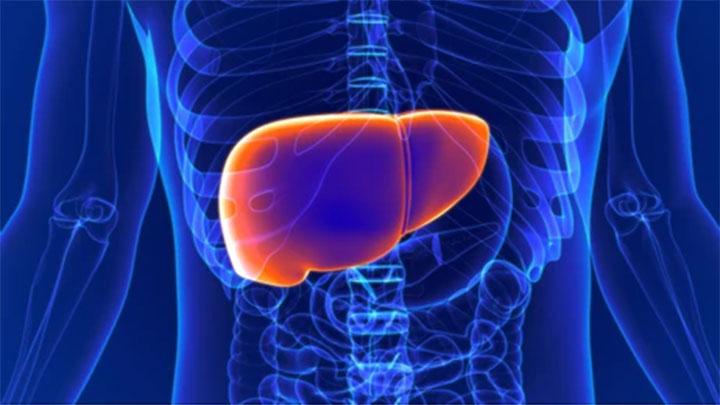
- 16 Mar 2024
Why is it in the News?
Madrigal Pharmaceuticals Inc.’s drug Rezdiffra gained the first US approval to treat a potentially deadly liver disease that affects millions worldwide, succeeding in an area where some bigger rivals have failed.
What is Nonalcoholic Steatohepatitis (NASH)?
- Nonalcoholic fatty liver disease (NAFLD) is a condition in which fat builds up in the liver.
- NASH (or nonalcoholic steatohepatitis) is a type of NAFLD that can damage the liver.
- NASH occurs when the fat buildup in the liver leads to inflammation (hepatitis) and scarring.
- NASH can be life-threatening, as it can cause liver scarring (called cirrhosis) or liver cancer.
- It is estimated that 3% to 5% of the global population is affected by NASH, though the disease is considered to be underdiagnosed.
Who gets NASH?
- The condition may be hereditary.
- If a person has family members who have had NASH or NAFLD, they are at risk.
- Additionally, having certain health conditions may increase a person’s risk of developing NASH. These include:
- Being overweight or obese.
- Having high cholesterol or high triglyceride levels.
- Having type 2 diabetes, insulin resistance, or prediabetes.
What are the signs and symptoms of NASH?
- NASH is known as a “silent” disease because many people present with few or no symptoms.
- However, some people will experience tiredness, pain, and discomfort in the upper right part of the abdomen.
How is NASH diagnosed?
- Diagnosing NASH can be challenging because symptoms may not be noticeable until the disease progresses.
- Healthcare providers typically suspect NASH based on abnormal blood or liver test results or imaging showing liver fat.
- Confirmation requires a liver biopsy, an invasive procedure with risks and expenses, involving taking a small liver sample for microscopic examination.
How is NASH treated?
- To manage NASH, losing weight is often recommended as it can reduce liver fat, inflammation, and scarring.
- This involves losing around 3% to 5% of body weight by limiting fats and sugars in the diet.
- Heavy alcohol use should also be avoided to prevent further liver damage.
- If NASH progresses to cirrhosis, treatment may involve medications, medical procedures, or even a liver transplant.
- Currently, there are no approved medications specifically for treating NASH, but ongoing research aims to develop new treatments.
Google Deepmind’s new AI that can play video games with you
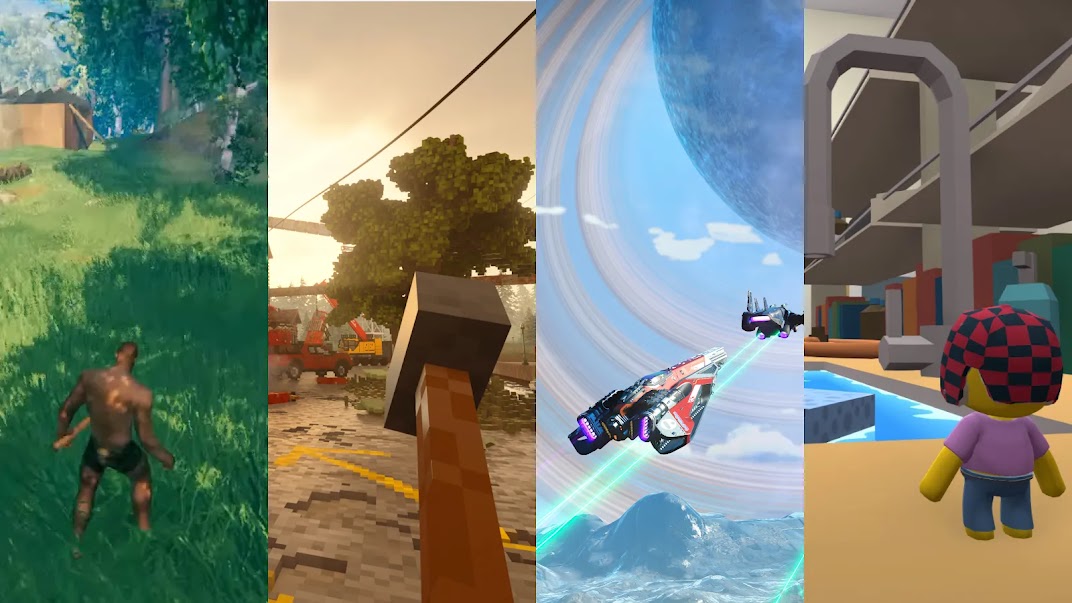
- 16 Mar 2024
Why is it in the News?
Google DeepMind recently revealed its latest AI gaming agent called SIMA or Scalable Instructable Multiworld Agent, which can follow natural language instructions to perform tasks across video game environments.
What is SIMA?
- Scalable Instructable Multiworld Agent (SIMA) is an AI Agent, which is different from AI models such as OpenAI’s ChatGPT or Google Gemini.
- AI models are trained on a vast data set and are limited when it comes to working on their own.
- On the other hand, an AI Agent can process data and take action themselves.
- SIMA can be called a generalist AI Agent that is capable of doing different kinds of tasks.
- It is like a virtual buddy who can understand and follow instructions in all sorts of virtual environments – from exploring mysterious dungeons to building lavish castles.
- It can accomplish tasks or solve challenges assigned to it.
- It is essentially a super-smart computer program that can be thought of as a digital explorer, having the ability to understand what you want and help create it in the virtual world.
How does SIMA work?
- SIMA can understand commands as it has been trained to process human language.
- So when we ask it to build a castle or find the treasure chest, it understands exactly what these commands mean.
- One distinct feature of this AI Agent is that it is capable of learning and adapting.
- SIMA does this through the interactions it has with the user.
- The more we interact with SIMA, the smarter it gets by learning from its experiences and improves over time.
- This makes it better at understanding and fulfilling user requests.
- Based on the current stage of AI development, it is a big feat for an AI system to be able to play even one game.
- However, SIMA goes beyond that and can follow instructions in a variety of game settings.
- This could potentially introduce more helpful AI agents for other environments.
Tesla’s India entry gets boost as government approves new EV policy
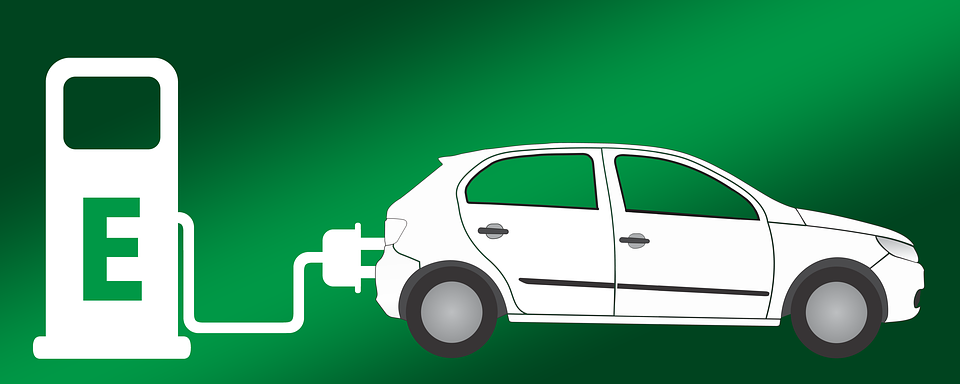
- 16 Mar 2024
Why is it in the News?
The government announced a new electric vehicle (EV) policy recently that is expected to provide a major boost to Tesla's plans to start operations in India.
What is the Revised EV Policy Offering Tax Incentives?
- The Government of India has sanctioned a new initiative aimed at positioning India as a premier manufacturing hub, fostering the production of cutting-edge electric vehicles (EVs) within the nation.
- Crafted to entice investments from renowned global EV manufacturers, this policy seeks to provide Indian consumers access to state-of-the-art EV technology while bolstering the Make in India campaign.
- By cultivating a competitive environment among EV players, the policy endeavors to fortify the EV ecosystem, stimulating innovation and efficiency.
- Furthermore, it is anticipated to stimulate substantial production rates, capitalize on economies of scale, and drive down production costs, consequently curbing crude oil imports, narrowing trade imbalances, and mitigating urban air pollution, thereby fostering a healthier environment for all.
Key Features of the Policy:
- Minimum Investment Requirement: Companies are mandated to invest a minimum of Rs 4,150 Crores.
- Investment Ceiling: There is no upper limit on the investment amount.
- Manufacturing Timeline: Companies must establish manufacturing facilities in India within 3 years and commence commercial production of e-vehicles.
- Within 5 years, they should achieve 50% domestic value addition.
- Domestic Value Addition (DVA): Localization levels of 25% by the 3rd year and 50% by the 5th year are mandatory during manufacturing.
- Customs Duty: A customs duty of 15%, applicable to Completely Knocked Down (CKD) units, will be enforced for 5 years.
- Import Limits: Import of at most 8,000 EVs annually is permitted under this scheme, with provisions for carrying forward unutilized import quotas.
- Bank Guarantee Requirement: Investment commitments necessitate bank guarantees to cover the forgone customs duty.
EV Adoption in India:
- In 2023, electric vehicle sales in India surged by 49.25% year-on-year, surpassing 15 lakh units, as the Federation of Automobile Dealers' Association (FADA) reported.
- This notable increase follows a total sale of approximately 10 lakh units recorded in 2022, indicating a rapid growth trajectory.
- Factors contributing to this surge include improved product availability, escalating fuel prices, state subsidies, and incentives provided under the FAME-II Initiative.
What is the FAME-II Scheme?
- The FAME India scheme, initiated in 2015, serves as an incentive program aimed at accelerating the adoption of electric and hybrid vehicles, with its acronym standing for "Faster Adoption and Manufacturing of Electric and Hybrid Vehicles in India."
- In 2019, the Central government sanctioned Phase II of the FAME Scheme with a budgetary allocation of 10,000 Crore over three years, extending until March 31, 2024.
- The primary objective of Phase II is to stimulate demand by facilitating the deployment of 7000 e-Buses, 5 lakh e-3 Wheelers, 55,000 e-4 Wheeler Passenger Cars (including Strong Hybrid), and 10 lakh e-2 Wheelers, thereby fostering the growth of the electric vehicle ecosystem.
- Under the FAME-II scheme, nearly 2 lakh vehicles have received support, signifying a significant stride towards electric vehicle adoption in the country.
Government Initiatives to Promote EV Usage:
- Battery Swapping Policy: The Battery Swapping Policy offers an alternative approach wherein discharged batteries are exchanged for charged ones, enabling efficient charging without vehicle downtime.
- NITI Aayog has recently unveiled a draft battery-swapping policy, prioritizing metropolitan cities with populations exceeding 40 lakh for the establishment of battery-swapping networks in the initial phase.
- Switching to EVs: Central and State governments extend upfront subsidies to mitigate the overall costs associated with electric vehicles, incentivizing consumers to transition towards cleaner mobility options.
- E-AMRIT Portal: The e-AMRIT portal serves as a comprehensive platform, furnishing resources and support to facilitate the seamless transition to electric vehicles, thereby bolstering the nation's electrification agenda.
Pandavula Gutta designated an exclusive Geo-heritage site in Telangana
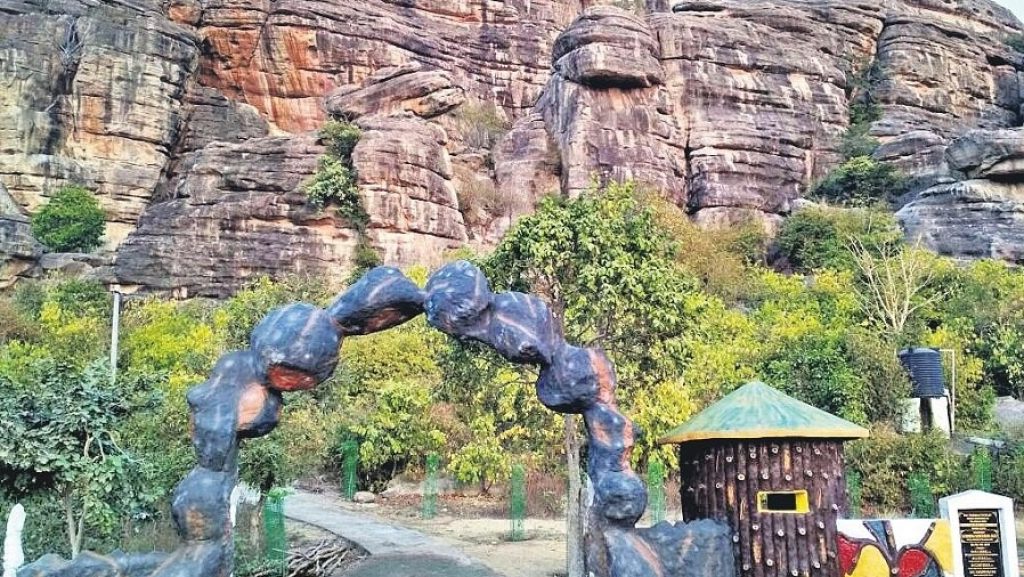
- 16 Mar 2024
Why is it in the News?
Pandavula Gutta, a geological marvel older than the Himalayan hills, has been officially recognized as the sole Geo-heritage site in Telangana.
What is Pandavula Gutta?
- Pandavula Gutta holds historical significance, being older than the Himalayas and renowned for its ancient rock paintings portraying diverse animals such as bison, antelope, tiger, and leopard, along with intricate geometric designs and symbols like swastikas, circles, and squares.
- These paintings indicate continuous human habitation from the Mesolithic period (around 12,000 to 6,000 BCE) through medieval times.
About Geo-heritage Sites:
- Geo-heritage sites encompass geological features of inherent or cultural significance, providing insights into the Earth's evolution or history, valuable for earth science and educational purposes.
- In India, the Geological Survey of India (GSI) identifies and designates these special places as Geo-Heritage Sites (GHS) to ensure their preservation, akin to UNESCO's protection of world heritage sites worldwide.
About the Geological Survey of India (GSI):
- The Geological Survey of India (GSI), established in 1851 initially to locate coal deposits for the Railways, has evolved into a comprehensive repository of geo-science information vital for various sectors in India.
- Its objective is to provide impartial and current geological expertise and geoscientific data to inform policy-making decisions and address commercial and socio-economic needs.
- Designated as the primary agency for geological mapping and regional mineral resources assessment under the National Mineral Policy (NMP) 2008, GSI emphasizes systematic documentation of geological processes across India and its offshore areas.
- Utilizing advanced techniques and methodologies, including geological, geophysical, and geochemical surveys, the organization operates from its headquarters in Kolkata, along with six regional offices and state units across the country.
- Presently, GSI operates as an attached office to the Ministry of Mines.
'ETHANOL 100' hits the road at 183 Indian Oil stations in five states
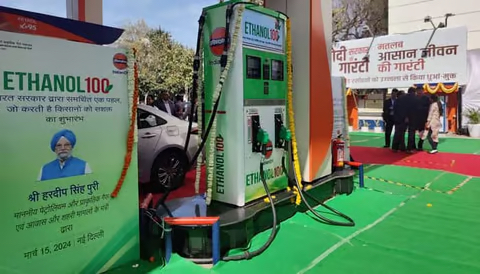
- 16 Mar 2024
Why is it in the News?
In a strategic advance towards cleaner fuel alternatives, India commenced the sale of ETHANOL 100 across 183 Indian Oil outlets in Maharashtra, Karnataka, Uttar Pradesh, New Delhi, and Tamil Nadu.
What is ETHANOL 100 Fuel?
- ETHANOL 100 fuel represents a significant advancement in automotive technology, offering a high-octane rating ranging from 100 to 105.
- This elevated octane level is particularly advantageous for high-performance engines, delivering improved efficiency and power output while simultaneously reducing environmental impact.
- One of the key features of ETHANOL 100 is its remarkable versatility, making it suitable for a diverse range of vehicles, including flex-fuel vehicles (FFVs) designed to accommodate various fuel types such as gasoline, ethanol, or any blend thereof.
- This adaptability ensures that ETHANOL 100 can seamlessly integrate into existing automotive fleets without requiring extensive modifications or infrastructure upgrades.
- The composition of ETHANOL 100 consists of approximately 93 to 93.5 percent ethanol blended with 5 percent petrol and 1.5 percent co-solvent acting as a binder.
- This well-balanced formulation not only enhances fuel performance but also contributes to its practicality as a mainstream fuel option.
- In addition to its performance benefits, ETHANOL 100 stands out as a cleaner and greener alternative to traditional gasoline.
- By emitting lower levels of greenhouse gases and pollutants, such as carbon dioxide and particulate matter, ETHANOL 100 plays a crucial role in mitigating climate change and improving air quality in our communities.
- With the right infrastructure and support mechanisms in place, ETHANOL 100 has the potential to revolutionize the automotive industry by offering a sustainable and eco-friendly fuel solution that aligns with the global efforts to combat environmental degradation and promote sustainable development.
What are Flex-fuel Vehicles?
- Flex-fuel vehicles are engineered to operate on a diverse range of fuels, offering consumers the flexibility to choose between petrol, ethanol, or methanol at the point of refueling.
- Equipped with an internal combustion engine (ICE), these vehicles can seamlessly switch between different fuel types, providing versatility and convenience to drivers.
- While possessing similarities to conventional petrol-only cars, flex-fuel vehicles undergo minor modifications to accommodate the use of alternative fuels, ensuring compatibility and optimal performance across various fuel options.
Devin AI, an AI software engineer, can handle coding projects end-to-end
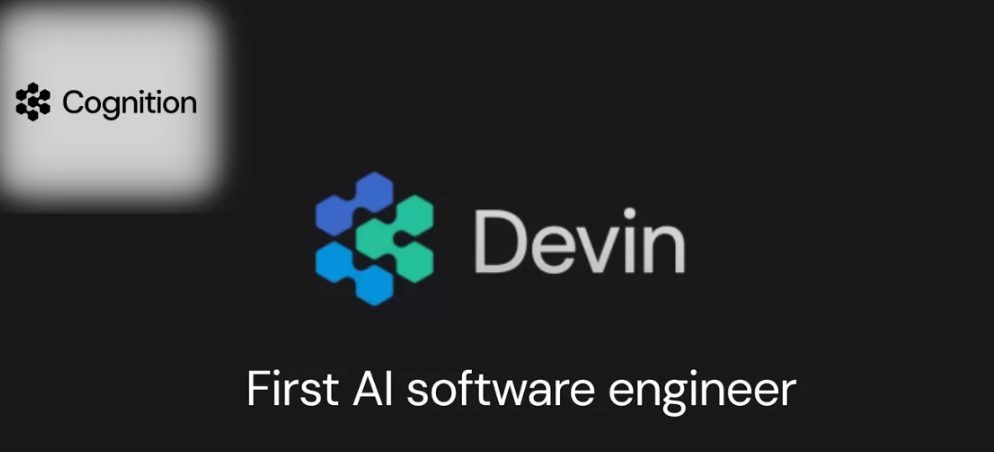
- 15 Mar 2024
Why is it in the News?
Recently, a US-based startup Cognition has unveiled an AI-powered tool, Devin, which it calls the “world’s first fully autonomous AI software engineer”.
What is Devin?
- Devin is a super-smart computer program created by a company called Cognition.
- It's like having a clever assistant for software engineering tasks.
- With just a simple instruction, Devin can write code, build websites, and make software all on its own.
- But Devin isn't trying to replace human engineers, instead, it's meant to work together with them to make their jobs easier.
- The special feature of Devin is its ability to think ahead and solve tricky problems.
- It can learn from its mistakes and keep getting better over time.
- Plus, it has all the tools that a human engineer needs, like a way to write code and browse the internet.
- Devin has been tested against other AI programs, and it did way better, solving almost 14 out of 100 problems compared to just under 2 for others.
- So, in simple terms, Devin is like a super-smart assistant that helps engineers do their work faster and better, without taking their jobs away.
How does Devin work?
- Devin works by using advanced artificial intelligence (AI) algorithms to understand and execute tasks related to software engineering.
- When given a prompt or instruction, Devin analyzes the request and uses its vast database of knowledge and problem-solving techniques to generate code, design websites, or develop software.
- One of Devin's key features is its ability to think ahead and plan complex tasks.
- It can make thousands of decisions based on the given task and learn from its mistakes to improve its performance over time.
- Devin also has access to essential tools like a code editor and web browser, enabling him to complete tasks from start to finish.
- It can learn new technologies, tackle a wide range of engineering challenges, and even train its own AI models.
- Additionally, Devin can collaborate with human engineers in real time, providing updates, accepting feedback, and contributing to design choices.
- Overall, Devin works by harnessing the power of AI to automate routine tasks, streamline workflows, and empower engineers to focus on more complex problems.
- By combining human expertise with machine intelligence, Devin represents a significant advancement in software engineering technology.
Conservationists to propose Kazhuveli watershed region in T.N. for nomination to World Monuments Fund Watch 2025
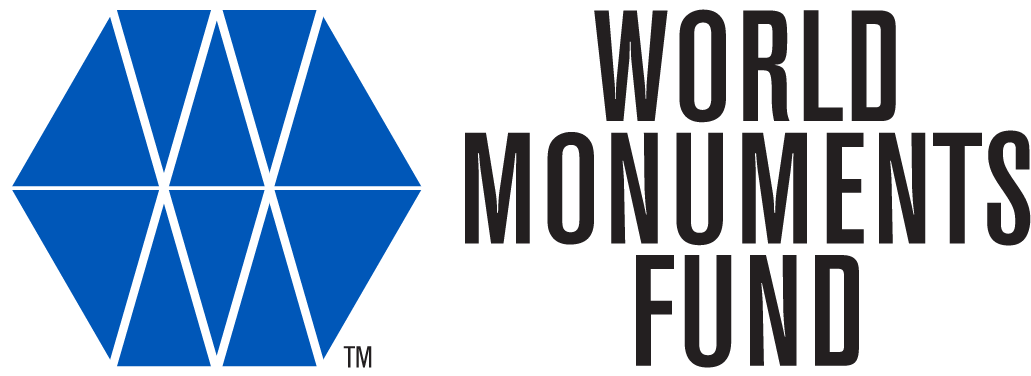
- 15 Mar 2024
Why is it in the News?
The Eri (tank) network in the Kazhuveli watershed region in the Villupuram district which comprises an incredible network of tanks created thousands of years ago is to be proposed for nomination to the World Monuments Fund Watch 2025 program.
About the World Monuments Fund (WMF)?
- The World Monuments Fund (WMF) is a non-profit organization headquartered in New York, committed to safeguarding and conserving endangered ancient and historic sites worldwide.
- Collaborating with local partners globally, the WMF offers financial and technical assistance to support preservation efforts.
- With a track record of raising over $300 million and securing an additional $400 million from other entities, the WMF has successfully preserved over 700 sites and championed the protection of more than 800 cherished landmarks since its establishment.
World Monuments Watch:
- The World Monuments Watch, initiated in 1996, is a program centered on nominations, fostering a link between local heritage conservation and international engagement.
- Through this initiative, the WMF has allocated over $110 million towards projects at over 300 Watch sites, enabling communities to utilize the platform's visibility to secure an additional $300 million from various funding sources.
World Monuments Fund in India:
In India, the World Monuments Fund (WMF) has focused on conserving significant cultural and ecological sites, including:
- The Kazhuveli Watershed Region: Renowned for its ancient 'Eri' network, an intricate system of tanks dating back thousands of years.
- Situated in the Villupuram district of Tamil Nadu, spanning from Gingee to Marakkanam and extending to the Auroville plateau.
- Proposed pilot projects in Munnur village aim to develop a heritage toolkit applicable across the watershed and beyond if the nomination is successful.
- Suranga Bawadi: An ancient water management system located on the Deccan Plateau in Karnataka.
- Included in the World Monument Watch list for 2020, highlighting its significance for preservation efforts.
Vision for Edible Oil Self-Reliance takes root in the North-East

- 15 Mar 2024
Why is it in the News?
Prime Minister Narendra Modi has reiterated the Government’s commitment to move towards self-sufficiency in edible oils production and harped on the importance of oil palm cultivation in the northeast region.
About the National Mission for Edible Oils - Oil Palm (NMEO-OP):
- The National Mission for Edible Oils - Oil Palm (NMEO-OP) is an initiative launched by the Government of India in August 2021 to significantly enhance oil palm cultivation and crude palm oil production.
- This centrally sponsored scheme prioritizes the North East region and the Andaman and Nicobar Islands, aiming to boost the area and productivity of oilseeds and Oil Palm.
- The targets of NMEO-OP include expanding the oil palm area to 10 lakh hectares by 2025-26, a substantial increase from 3.5 lakh hectares in 2019-20, along with elevating Crude Palm Oil production to 11.20 lakh tonnes by 2025-26 from 0.27 lakh tonnes in 2019-20.
- Furthermore, the mission seeks to enhance consumer awareness to maintain a consumption level of 19.00 kg/person/annum until 2025-26.
- Implementation of NMEO-Oil Palm involves various stakeholders such as the State Departments of Agriculture and Horticulture, Central University, ICAR-Institutions, CDDs, SAUs, KVKs, Central Agencies/Cooperatives, Oil palm processors/ Associations, DD Kisan, AIR, DD, TV channels.
- The salient features of NMEO-OP encompass assistance for planting material, inputs for intercropping up to a gestation period of 4 years, the establishment of seed gardens and nurseries, micro-irrigation, bore well/pump set/water harvesting structure, vermicompost units, solar pumps, harvesting tools, custom hiring center cum harvester groups, farmers and officers training, and replanting of old oil palm gardens, among others.
Oil Palm Production in India:
- Originating in West Africa, Oil Palm (Elaeis guineensis) is a relatively recent crop in India known for its high vegetable oil yield per hectare.
- It yields two main oils, palm oil, and palm kernel oil, utilized in both culinary and industrial applications.
- The primary oil palm-growing states in India include Andhra Pradesh, Telangana, and Kerala, which collectively contribute to 98% of the total production.
- Additionally, Karnataka, Tamil Nadu, Odisha, Gujarat, and Mizoram also have significant areas dedicated to oil palm cultivation.
India ranks 134th in global human development index
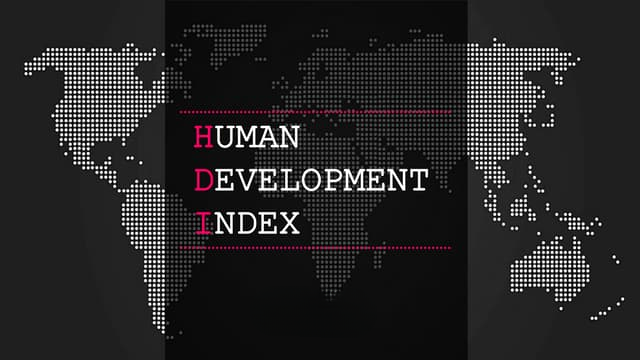
- 15 Mar 2024
Why is it in the News?
India has moved up a rank on the global Human Development Index (HDI), according to the United Nations Development Programme (UNDP) report ‘Breaking the gridlock: Reimagining cooperation in a polarised world’ released recently.
Highlights of the Recent Report:
- The latest report revealed that India's global ranking improved slightly from 135th in 2021 to 134th in 2022, with a total of 193 countries assessed in 2022 compared to 191 in the previous year.
- In 2022, India exhibited progress across all Human Development Index (HDI) parameters, including life expectancy, education, and Gross National Income (GNI) per capita.
- Notable advancements were observed in life expectancy, which increased from 67.2 to 67.7 years, while expected years of schooling reached 12.6, mean years of schooling rose to 6.57, and GNI per capita saw an uptick from $6,542 to $6,951.
- Despite these positive strides, India continues to lag behind its South Asian counterparts, such as Bangladesh (129th), Bhutan (125th), Sri Lanka (78th), and China (75th).
What is the Human Development Index (HDI)?
- The Human Development Index is published by the United Nations Development Programme (UNDP).
- It is the most well-known index of human development.
- It is based on the idea that human development means that people have long and healthy lives, are knowledgeable, and have a decent standard of living.
- More specifically, these three dimensions are measured with four indicators:
- A long and healthy life: measured by life expectancy at birth
- Knowledge: measured by expected years of schooling (for children of school entering age) and average years of schooling (for adults aged 25 and older)
- A decent standard of living: measured by Gross National Income (GNI) per capita
- Represented on a scale from 0 to 1, the HDI value reflects a country's level of human development, with higher values indicating greater development.
- Computed as the geometric mean of normalized indices for each dimension, it offers a nuanced understanding of a nation's progress.
- Furthermore, the HDI aligns with Amartya Sen's 'capabilities' approach, emphasizing the significance of achieving substantive ends in human well-being beyond mere economic indicators.
- Since its inception in 1990, the United Nations Development Programme (UNDP) has annually published the Human Development Report, which incorporates the latest HDI findings and insights.
Honoring, the Architect of Mumbai (Bombay)
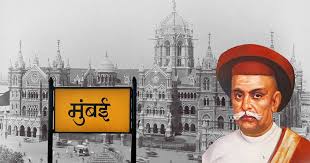
- 15 Mar 2024
Why is it in the News?
The Maharashtra cabinet recently decided to ask the Ministry of Railways to rename Mumbai Central Station after Nana Jagannath Shankarseth.
Who was Nana Jagannath Shankarseth?
- Nana Jagannath Shankarseth was a social reformer, educationist, and philanthropist and often described as the “architect” of Mumbai (then Bombay).
- He made extremely valuable contributions in terms of both ideas and money to multiple sectors, to lay a strong foundation for the city.
- Shankarseth was greatly inspired by the legendary merchant and philanthropist Sir Jamsetjee Jeejeebhoy.
- As a social reformer and community leader, Shankarseth earned the goodwill of both Indians and the British.
- He became the first Indian to be nominated to the Legislative Council of Bombay.
Shankarseth’s Most Significant Contributions:
- Education: Shankarseth was deeply committed to the growth and spread of education in Bombay, and donated land owned by his family for educational institutions.
- Like many social reformers of his age, he believed that Indians could progress through education.
- He also worked for the education of girls and women.
- Shankarseth founded the Native School of Bombay, which was renamed first as the Bombay Native Institution, and then as the Board of Education.
- Finally, this institution evolved into the prestigious Elphinstone College.
- Museum, Temples: Shankarseth was among the wealthy donors who helped promote Dr Bhau Daji Lad Museum in Byculla, which was designed by a famous London-based architect.
- The Bhawani Shankar Temple near Nana Chowk was Shankarseth’s tribute to his late mother Bhawanibai Murkute.
- He also built a Ram temple.
- Railways: The first train in India ran between Boribunder and Thane on April 16, 1853.
- The 34-km project was undertaken by the Great Indian Peninsular Railway Company.
- The committee that gave the project impetus included Sir Jamsetjee Jeejeebhoy and Nana Shankarseth.
World Pi Day 2024: International Day Of Mathematics And Worldwide Celebrations

- 14 Mar 2024
Why is it in the News?
Every year, International Day of Mathematics (IDM) is celebrated on March 14 to spread awareness about its role in solving real-world problems.
About International Day of Mathematics:
- Every year, International Day of Mathematics (IDM) is celebrated on March 14 to spread awareness about its role in solving real-world problems.
- The United Nations Educational, Scientific and Cultural Organization (UNESCO) declared the International Day of Mathematics at the 40th General Conference on November 19, 2019.
- This day also sheds light on Mathematics' importance in different areas like climate change, energy, artificial intelligence, and sustainable development.
- International Day of Mathematics coincides with International Pi Day.
- Pi is one of the most widely known mathematical constants and it is rounded to 3.14, which is why it is observed on March 14.
- IDM is an opportunity to educate students about the role and importance of mathematics in improving quality of life.
- It also empowers women and girls to contribute to achieving sustainable development goals for the 2030 agenda.
History:
- The 205th session of UNESCO’s Executive Council adopted the International Day of Mathematics.
- The 40th session of UNESCO's General Conference adopted March 14 as the International Day of Mathematics, which was the first official celebration with the theme 'Mathematics is Everywhere'.
- It is an opportunity to understand the importance of mathematics in daily life promoting mathematics use for the advancement of society.
Significance:
- International Day of Mathematics is celebrated to promote Mathematics in different fields highlighting the role of mathematics in solving the real-life world and addressing social concerns.
- IDM shows the application of mathematics in different fields of life including science, technology, engineering, and economics.
- IDM promotes mathematics at different levels encouraging educators, policymakers, parents and to stress the importance of mathematics and inspire students to pursue careers in STEM fields.
- STEM stands for Science, Technology, Engineering, and Mathematics. It is an opportunity to share research, discoveries, and insights with the general public and demystify the subject to make it more accessible.
- International Day of Mathematics is a global initiative to foster collaboration and exchange ideas across borders, cultures, and disciplines.
- The day aims to promote mathematics and help address global challenges through it.
The theme for International Day of Mathematics 2024:
The theme for International Day of Mathematics 2024 is 'Playing With Math.'
News-sharing service by Prasar Bharati launched, content to be ‘free of copyright’

- 14 Mar 2024
Why is it in the News?
Ahead of the Lok Sabha polls, public broadcaster Prasar Bharati launched a news-wire-like service to offer free content across mediums, which will be free of copyright or credit obligations.
What is PB-SHABD?
- PB-SHABD, an acronym for Prasar Bharti - Shared Audio Visuals for Broadcast and Dissemination, is a comprehensive platform designed to deliver daily news feeds encompassing video, audio, text, photos, and other formats to media subscribers.
- Leveraging the expansive network of Prasar Bharati reporters, correspondents, and stringers, the service offers up-to-the-minute news coverage spanning various regions of the country.
- Functioning as a centralized hub for news content, SHABD serves as a valuable resource for organizations, offering a wide array of news stories across fifty categories in all major Indian languages.
- Furthermore, the shared feeds facilitate tailored storytelling across diverse platforms, catering to the specific needs of newspapers, TV channels, and digital portals.
- In an inaugural gesture, the service is provided free of charge for the initial year, extending invaluable support to smaller media outlets and contributing to enhanced accessibility to news content.
About Prasar Bharti:
- Prasar Bharti functions as the nation's Public Service Broadcaster, operating under the Prasar Bharati Act established in 1997 as a statutory autonomous body.
- Its primary objective is to deliver public broadcasting services aimed at informing and entertaining the public.
- Comprising the former media units of the Ministry of Information and Broadcasting, namely the Doordarshan Television Network and All India Radio, Prasar Bharti plays a vital role in disseminating news and entertainment content.
- Headquartered in New Delhi, Prasar Bharti serves as a cornerstone of India's media landscape, dedicated to fulfilling its mandate of public service broadcasting.
Lab to monitor seawater quality and testbed to track monsoon systems inaugurated
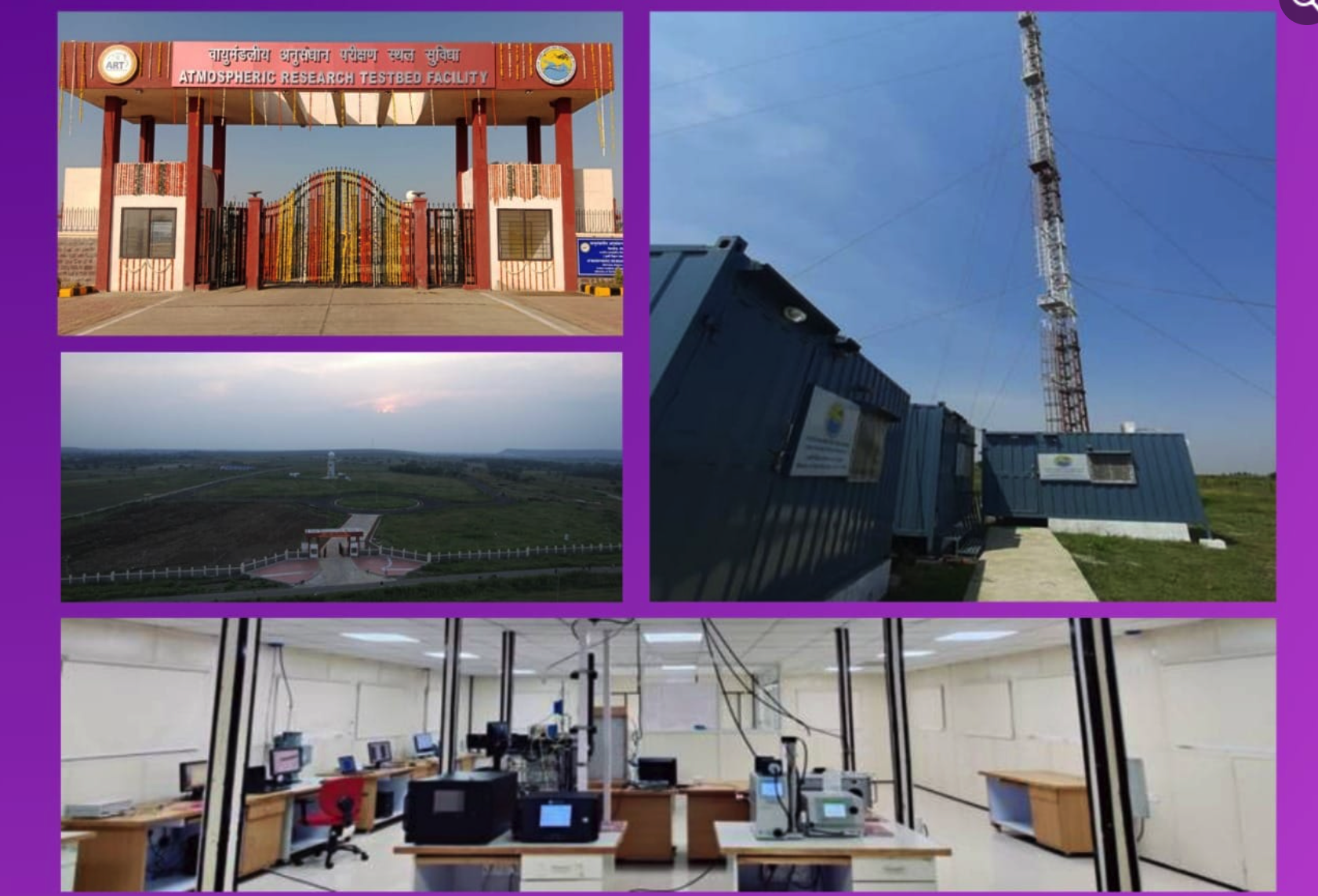
- 14 Mar 2024
Why is it in the News?
Recently India commissioned the atmospheric testbed facility near Bhopal, equipped with high-end instruments to record vital parameters for enhancing weather models and conducting advanced studies on the Indian monsoons, with construction commencing in early 2018.
What is the Atmospheric Research Testbed (ART)?
- The ART is an open-field, focused observational and analytical research programme at Silkheda.
- The facility aims to conduct ground-based observations of weather parameters like temperature, wind speeds, etc., and in-situ (on-site) observations of the transient synoptic systems – like low-pressure areas and depressions that form in the Bay of Bengal – during the southwest monsoon season from June to September.
- Studying these systems and their associated cloud parameters will be used to generate high volumes of data over a long period.
- It can then be compared with the existing weather models so that improvements can be made to obtain accurate rainfall predictions.
- The setup at ART will also be used for calibrating and validating various satellite-based observations, part of weather predictions and forecasting.
- Spread over 100 acres, the ART has been developed by the Ministry of Earth Sciences for Rs 125 crore.
- The Indian Institute of Tropical Meteorology (IITM), Pune, is in charge of the operations.
- Under the first phase, remote sensing-based and in-situ measurements using 25 meteorological instruments have commenced.
- In the second phase, ART will deploy instruments such as a radar wind profiler and balloon-bound radiosonde, and soil moisture and temperature measuring equipment.
What instruments are ART equipped with?
- To obtain continuous observations of convection, clouds, and precipitation, and monitor the major modes of variabilities, the ART is equipped with over two dozen high-end instruments, radars, and more.
- At 72 meters, ART will house India’s tallest meteorological tower.
- Some of the instruments deployed are an aethalometer for performing aerosol studies, a cloud condensation nuclei counter, a laser ceilometer to measure cloud sizes, a micro rain radar to calculate raindrop size and its distribution, and a Ka-band cloud radar and a C-band Doppler weather radar to help track the movement of rain-bearing systems over this zone.
Why is having an Atmospheric Research Testbed important?
- At present, 45% of India’s labor force is employed in the agriculture sector and much of Indian agriculture is rain-fed.
- Cultivation along the Monsoon Core Zone (MCZ), which spans the central India region from Gujarat to West Bengal, is primarily rainfall-fed.
- The southwest monsoon season accounts for 70 percent of the country’s annual average rainfall (880mm).
- Throughout India, the majority of Kharif cultivation is undertaken between July and August, which see an average monthly rainfall of 280.4mm and 254.9mm (1971–2020 average), respectively.
- During this four-month-long season, several rain-bearing synoptic systems, namely the low pressures or depressions, develop in the Bay of Bengal.
- Inherently, these systems move westwards/northwestwards over to the Indian mainland and pass through the MCZ, causing bountiful rainfall.
Why is it important to have data about monsoons over central India?
- Studies have correlated the all-India rainfall performance to the rainfall received over the central India region, highlighting its importance.
- The India Meteorological Department (IMD) issues rainfall forecasts for the country’s four homogeneous regions – north, west, east, and south peninsular India.
- In addition, it issues a special rainfall forecast for the MCZ, which is considered India’s food bowl.
- However, there is still limited understanding of the role of these synoptic systems, their associated cloud physics, cloud properties, and their overall role in enhancing the monsoon rainfall.
- Central India, therefore, acts as a natural laboratory for scientists and meteorologists to perform a hands-on study of the Indian monsoons.
- They can record data and make observations about the allied systems, clouds, and other associated physical and atmospheric parameters.
- Additionally, climate change is driving erratic rainfall patterns in tropical regions, like India.
- It has also strengthened the low-pressure systems, which are aided by high temperatures.
- This results in very heavy rainfall recorded along their trajectory during the monsoons.
- Now, with ART, scientists will be able to generate and obtain long-term observations on cloud microphysics, precipitation, convection, and land-surface properties, among a host of other parameters.
- This information will be assimilated and fed into the numerical weather models to enhance forecast output, especially the rainfall forecasts.
- More accurate forecasts will ultimately help the farming community plan their activities better.
Why Madhya Pradesh?
- The ART has been established at Silkheda, a location that falls directly in line with the path of major rain-bearing synoptic systems.
- This will facilitate direct monitoring and tracking.
- Besides, the locality is pristine and free of anthropogenic and other pollutants, making it the best site in central India for setting up sensitive, high-end meteorological instruments and observatories for recording data.
Methane emissions from fossil fuels remain high despite progress, US tops list of emitters: IEA

- 14 Mar 2024
Why is it in the News?
As per the International Energy Agency’s (IEA) Global Methane Tracker 2024, methane emissions from fuel consumption in 2023 approached record levels, nearing their highest point in history.
About the Global Methane Tracker:
- The Global Methane Tracker is an annual publication issued by the International Energy Agency (IEA), presenting the latest data on methane emissions primarily from the energy sector. It integrates recent scientific research, measurement campaigns, and satellite data.
Key Highlights from the Global Methane Tracker 2024:
- Methane emissions from fuel usage in 2023 approached record levels, reaching approximately 120 million tonnes (Mt), marking a slight increase from the previous year.
- Bioenergy, derived from plant and animal waste, contributed an additional 10 million tons of emissions.
- Out of the total methane emissions, around 80 million tons originated from ten countries, with the United States and Russia leading in emissions from oil and gas operations, and China leading in emissions from coal operations.
- Despite indications of declining emissions in certain regions, the overall methane emissions remain alarmingly high, posing a significant challenge to achieving global climate objectives.
- To align with the Paris Agreement goal of limiting warming to 1.5°C, there is a critical need to reduce methane emissions from fossil fuels by 75 percent by 2030.
- Achieving this target would require an estimated investment of approximately $170 billion, representing less than 5 percent of the revenue generated by the fossil fuel industry in 2023.
About the International Energy Agency (IEA):
- The International Energy Agency is an intergovernmental organization headquartered in Paris, established in 1974.
- Its primary mandate is to ensure stability in the international oil supply, a response to the oil crisis of 1973, which led to temporary disruptions in the global oil supply chain.
- Operational Framework: The IEA functions within the broader scope of the Organization for Economic Co-Operation and Development (OECD).
- Membership: As of 2022, the IEA comprises 31 member nations, with India joining as an associate member in 2017.
- Key Requirement: Member countries are obligated to maintain reserves equivalent to 90 days of the previous year's net oil imports.
- These reserves must be readily accessible by the government to address potential disruptions in the global oil supply chain, even if the reserves are not owned directly by the government.
NITI Aayog launches 'vocal for local' initiative to promote grassroots-level entrepreneurship
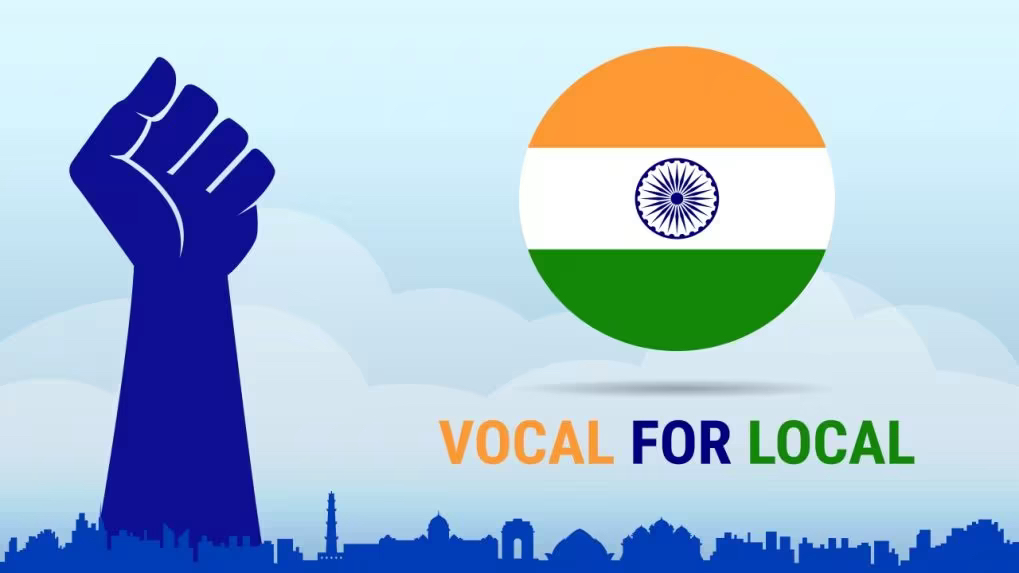
- 14 Mar 2024
Why is it in the News?
NITI Aayog on Wednesday launched the 'Vocal for Local' initiative under its Aspirational Blocks Programme to bolster local economies and foster grassroots-level entrepreneurship, an official statement said.
What is the ‘Vocal for Local’ Initiative?
- The 'Vocal for Local' initiative, led by NITI Aayog through its Aspirational Blocks Programme, aims to foster self-reliance and sustainable development.
- Under this initiative, products from 500 aspirational blocks have been curated and unified under the Aakanksha brand.
- Aakanksha is an overarching brand, with potential extensions into various sub-brands to tap into global markets.
- A dedicated section has been established on the Government e-Marketplace (GeM) portal under the Aakanksha brand to promote these products.
- Additionally, partners in the initiative offer support in areas such as e-commerce facilitation, establishing market linkages, financial and digital literacy, documentation and certification, and skill enhancement.
About Aspirational Blocks Programme:
- Inspired by the Aspirational District Programme launched in 2018, the Aspirational Blocks Programme extends its reach to 112 districts nationwide.
- This new initiative targets the enhancement of underperforming blocks across various development indicators.
- It aims to foster comprehensive growth in regions requiring additional support.
- Initially encompassing 500 districts across 31 States and Union Territories, the programme focuses on blocks in six key states: Uttar Pradesh (68 blocks), Bihar (61), Madhya Pradesh (42), Jharkhand (34), Odisha (29), and West Bengal (29).
What is the Government e-Marketplace (GeM)?
- Established in 2016 by the Ministry of Commerce and Industry, Government of India, the Government e-Marketplace (GeM) serves as an online platform for public procurement.
- GeM acts as a centralized portal, streamlining the procurement process for common-use Goods & Services required by various Government Departments, Organizations, and PSUs.
- Purchases made through GeM by Government users are mandated by the Ministry of Finance under the General Financial Rules, 2017.
- GeM is operated by GeM SPV (Special Purpose Vehicle), a 100% Government-owned, non-profit company operating under the Ministry of Commerce and Industry.
On Dandi March anniversary, PM Modi launches master plan for Sabarmati Gandhi Ashram redevelopment
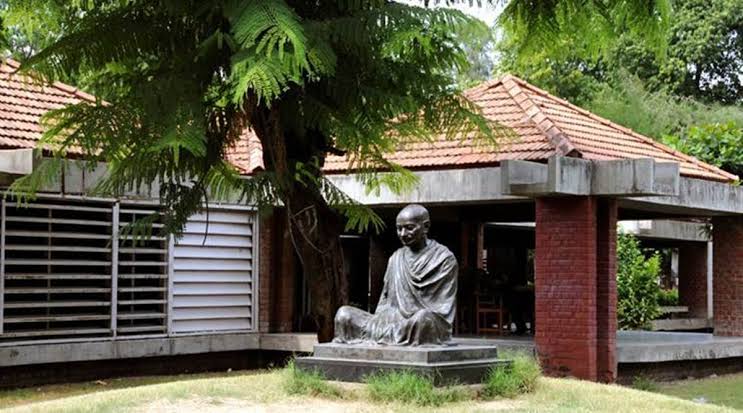
- 13 Mar 2024
Why is it in the News?
Describing various initiatives of his government as “a way of its dedication towards Mahatma Gandhi”, Prime Minister Narendra Modi launched a master plan for the Sabarmati Gandhi Ashram redevelopment project in Ahmedabad recently, on the anniversary of the historic Dandi March.
About Sabarmati Gandhi Ashram redevelopment project:
- On the anniversary of the historic Dandi March, Prime Minister Narendra Modi launched a master plan for the Sabarmati Gandhi Ashram redevelopment project in Ahmedabad.
- This joint initiative by the central government and the Gujarat government, known as the Gandhi Ashram Memorial and Precinct Development Project, is set to cost around Rs 1,200 crore.
- During the inauguration, PM Modi emphasized the importance of conserving heritage sites, stating that "a country which cannot conserve its heritage also loses its future."
- He highlighted the collective responsibility of all Indians to preserve this globally renowned site, which holds immense historical and cultural significance.
- The government's commitment to restoring old buildings to their original form, with the aim of eliminating the need for new constructions, was outlined by PM Modi.
- This approach aligns with the principle of preserving the authenticity and integrity of heritage sites, ensuring that future generations can experience and appreciate their true essence.
- The Sabarmati Gandhi Ashram, established by Mahatma Gandhi in 1917, played a pivotal role in India's struggle for independence.
- By undertaking this redevelopment project, the government seeks to honor the legacy of the father of the nation and create a space that inspires future generations to learn from his life and teachings.
About Dandi March:
- The Dandi March, also known as the Salt March or Salt Satyagraha, was a significant non-violent protest action led by Mahatma Gandhi in March-April 1930.
- This landmark event marked the beginning of a larger civil disobedience campaign that Gandhi waged against British rule in India, which extended into early 1931.
- The Dandi March garnered widespread support for Gandhi among the Indian populace and drew considerable international attention.
- The motivations behind the Dandi March were rooted in the British monopoly over salt production and distribution in India.
- A series of laws prohibited Indians from producing or selling salt independently, forcing them to purchase heavily taxed salt that was often imported.
- This affected the majority of Indians, who were poor and could not afford the high cost of salt. Indian protests against the salt tax had begun in the 19th century and remained a major point of contention throughout British rule.
- By undertaking the Dandi March and defying the salt laws, Gandhi sought to mobilize the Indian populace against British oppression and galvanize support for the Indian independence movement.
- The march, which covered over 240 miles from Sabarmati Ashram to Dandi, symbolized the spirit of nonviolent resistance and civil disobedience that would come to characterize India's struggle for freedom.
Impact of Dandi March:
- The Dandi March had a profound impact on the Indian independence movement and left an indelible mark on the country's history.
- The mass civil disobedience that ensued after Gandhi's iconic march led to millions of Indians breaking the salt laws by making or buying illegal salt.
- Gandhi's unwavering commitment to satyagraha against the salt tax inspired countless others to join the movement, including prominent leaders like Jawaharlal Nehru.
- Thousands were arrested and imprisoned, including Gandhi himself, but the spirit of resistance only grew stronger.
- News of Gandhi's detention galvanized tens of thousands more to join the satyagraha, and the march on the Dharasana salt works went ahead as planned in May 1931.
- Despite facing violent opposition from the police, the peaceful marchers, led by the poet Sarojini Naidu, persisted in their nonviolent resistance.
- Gandhi's release from custody in January 1931 marked a turning point, as he began negotiations with Lord Irwin aimed at ending the satyagraha campaign.
- These efforts culminated in the Gandhi-Irwin Pact, signed on March 5, 1931, which formalized a truce between the Indian independence movement and the British government.
- The Dandi March, therefore, served as a catalyst for change, uniting Indians from all walks of life in a shared struggle for freedom and justice.
- The events of the Salt Satyagraha remain an enduring symbol of the power of nonviolent resistance and the indomitable spirit of the Indian people in their quest for self-determination.
Khelo India Rising Talent Identification will take sports to the doorstep of aspiring champions
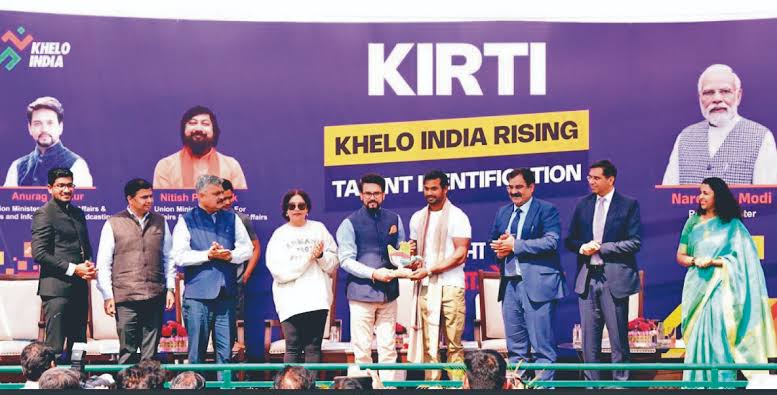
- 13 Mar 2024
Why is it in the News?
Union Minister for Youth Affairs and Sports, Shri Anurag Singh Thakur inaugurated the unique Khelo India Rising Talent Identification (KIRTI) programme amidst much enthusiasm at the Sector 7 sports complex, in Chandigarh recently.
About the KIRTI Programme:
- The KIRTI Programme is an ambitious nationwide initiative aimed at school children between the ages of nine and 18.
- With a dual focus, the scheme strives to uncover hidden talent from every corner of the country while simultaneously utilizing sports as a powerful tool to combat addiction to drugs and digital distractions.
Primary Objectives of KIRTI's Programme:
- Identifying and nurturing talented young athletes from across India, ensuring that no potential goes unnoticed.
- Leveraging sports as a means to steer youth away from harmful addictions and encourage a healthier, more active lifestyle.
- To achieve these goals, KIRTI plans to conduct 20 lakh assessments throughout the year at designated Talent Assessment Centres across the nation.
- The programme launched with a strong start at 50 centers in India, assessing 50,000 applicants in the first phase across 10 sports such as athletics, boxing, wrestling, hockey, and football.
- KIRTI's athlete-centric approach is characterized by its transparent selection methodology, which is grounded in Information Technology.
- The programme employs data analytics based on Artificial Intelligence to predict sporting potential in aspiring athletes, ensuring that talent identification is both objective and data-driven.
- By channeling India's youth towards sports and providing them with the necessary support, KIRTI aims to foster a new generation of athletes and promote a healthier, more active society.
About Khelo India Scheme:
- The Khelo India Scheme is the flagship initiative of the Ministry of Youth Affairs & Sports, Government of India.
- This Central Sector Scheme is designed to instill a sports culture and achieve sporting excellence in the country by leveraging the transformative power of sports and its cross-cutting influence.
- The Khelo India Scheme encompasses multiple verticals, with "Sports Competitions and Talent Development" being a key focus area.
- Within this vertical, the "Talent Identification and Development" component plays a crucial role in identifying and nurturing athletes at both the grassroots and elite levels.
- The primary objective is to strengthen the sports ecosystem in India by cultivating talent and providing athletes with the necessary resources and support to excel in their respective disciplines.
- Through the Khelo India Scheme, the government aims to promote sports as a way of life, encouraging greater participation and creating a robust platform for athletes to showcase their skills.
- By investing in sports infrastructure, training, and competition opportunities, the scheme seeks to establish India as a global sporting powerhouse and inspire future generations to embrace the spirit of sportsmanship and athletic achievement.
Govt's new code bars unethical marketing of drugs by pharma firms

- 13 Mar 2024
Why is it in the News?
The government has notified a new legal code to curb the unethical marketing of drugs and banning medical representatives from using “inducement” to access healthcare professionals
About the Uniform Code of Pharmaceutical Marketing Practices (UCPMP) 2024:
- The UCPMP 2024 has been implemented to regulate unethical practices within the pharmaceutical industry, with a focus on promoting transparency and ethical conduct.
- The updated guidelines encompass various aspects, including drug endorsement, promotion, ethical behavior for medical representatives, and the maintenance of professional relationships with healthcare professionals.
Key provisions of the UCPMP 2024 include:
- Prohibiting the offering of gifts and travel facilities to healthcare professionals or their family members by pharmaceutical companies.
- Mandating that medical representatives should not use any form of inducement or subterfuge to gain interviews with healthcare professionals, nor should they provide payment for access under any guise.
- Holding pharmaceutical companies responsible for the actions of their medical representatives.
- Banning the supply of free drug samples to individuals who are not qualified to prescribe such products.
- Requiring each pharmaceutical company to maintain detailed records of free samples provided to healthcare practitioners, with the total value of distributed samples not exceeding two percent of the company's domestic sales per year.
- Compulsory constitution of an Ethics Committee for Pharmaceutical Marketing Practices (ECPMP) by all pharmaceutical associations, along with the establishment of a dedicated UCPMP portal on their websites for implementation and monitoring purposes.
- Detailed guidelines on how drugs should be promoted in textual and audio-visual marketing materials, ensuring that information is balanced, up-to-date, verifiable, and non-misleading.
- Restrictions on making unverified claims and comparisons about a drug's usefulness, as well as using terms like "safe" and "new" without proper qualification.
- Assigning responsibility for adherence to the UCPMP 2024 to the Chief Executive Officers of pharmaceutical companies.
- Outlining penalties for violating the code and establishing a clear process for handling complaints, ensuring accountability and effective oversight.
- The UCPMP 2024 serves as a comprehensive framework for promoting ethical practices within the pharmaceutical industry, aiming to protect the interests of patients, healthcare professionals, and other stakeholders while fostering an environment of transparency and integrity.
India world’s top arms importer between 2019-23: SIPRI

- 13 Mar 2024
Why is it in the News?
India was the world’s top arms importer for the period 2019-23 with imports having gone up by 4.7% compared to the period 2014-18, according to the SIPRI.
Highlights from the SIPRI Report 2023:
- The report highlights that India continues as the world’s largest arms importer, maintaining this position despite ongoing efforts to enhance its defense-industrial base, accounting for a significant 9.8% of global arms imports between 2019 and 2023.
- There has been a steady increase in India's arms imports, with a 4.7% rise observed between 2014-18 and 2019-23, attributed in part to emergency procurements prompted by the prolonged military standoff with China.
- The dynamics of arms suppliers are changing, with Russia historically serving as India's primary weapons supplier, still accounting for 36% of its arms imports, although there is a shift towards diversification, with India increasingly turning to Western countries and domestic manufacturers.
- Notably, between 2019-23, Russian deliveries constituted less than half of India's arms imports for the first time since 1960-64.
- Western suppliers like France and the United States are emerging as key players, collectively accounting for 46% of India's arms imports, with significant contracts in progress, such as India's procurement of 31 armed MQ-9B Sky Guardian drones from the US and 26 Rafale-M fighters from France.
- In the global arms trade landscape, India ranks as the top importer, followed by Saudi Arabia, Qatar, Ukraine, Pakistan, Japan, Egypt, Australia, South Korea, and China, while the United States leads among exporters with a 42% share, followed by France and Russia.
- India's role as a major arms customer is underscored by its position as the largest arms customer for France, Russia, and Israel, highlighting its significance in global arms procurement.
- Meanwhile, China remains a dominant supplier to Pakistan, accounting for 61% of its exports, and also exports 11% of its arms to Bangladesh, consolidating its influence in the region.
Challenges Encountered by India in Indigenous Production of Defense Equipment:
- Efforts to promote indigenous defense production, exemplified by initiatives like 'Make in India', have encountered persistent challenges, notably the failure to materialize any projects under the Strategic Partnership (SP) model, which was introduced to foster collaboration between the public and private sectors within the defense industry.
- The SP model, designed to facilitate joint endeavors between government-owned defense entities and private companies, has yet to yield tangible results, necessitating a thorough review of the policy framework.
- Key areas for improvement include a reevaluation of pricing methodologies, ensuring long-term orders to sustain production, and addressing bottlenecks that impede project implementation.
- Furthermore, India's defense sector has seen minimal Foreign Direct Investment (FDI), amounting to only Rs 5,077 crore since the sector was opened to private companies in 2001.
- Despite efforts to liberalize FDI regulations, such as allowing up to 74% through the automatic route and up to 100% through the government route in 2020, investment inflows remain disproportionately low.
About Stockholm International Peace Research Institute (SIPRI):
- The Stockholm International Peace Research Institute (SIPRI) is a renowned independent international institute committed to investigating various aspects of conflict, armaments, arms control, and disarmament.
- Founded in 1966 and headquartered in Stockholm, Sweden, SIPRI consistently ranks among the world's most respected think tanks.
SIPRI's mission is multi-faceted and encompasses the following key objectives:
- Conducting in-depth research and activities related to security, conflict, and peace, with the aim of developing a deeper understanding of the complex factors that influence global stability.
- Providing insightful policy analysis and recommendations to policymakers, international organizations, and civil society actors, helping them make informed decisions and develop strategies to address security challenges.
- Facilitating dialogue and building capacities among various stakeholders, including governments, academia, and non-governmental organizations, to foster cooperation and promote mutual understanding on peace and security issues.
- Promoting transparency and accountability in the field of international security by maintaining comprehensive databases on arms transfers, military expenditure, and other relevant data, which contribute to a more accurate assessment of global security trends.
- By adhering to these core principles and objectives, SIPRI plays a vital role in advancing the global discourse on peace and security, while supporting efforts to mitigate conflict and promote stability worldwide.
Decoding the Trillion-Dollar Impact of GPUs on the AI Industry

- 13 Mar 2024
Why is it in the News?
As the global demand for the latest AI technologies surges, one unexpected item has emerged as a highly sought-after commodity: the graphics processing unit (GPU).
What is a Graphics Processing Unit (GPU)?
- A Graphics Processing Unit (GPU) is a specialized computer chip designed to efficiently render graphics and images by performing rapid mathematical calculations.
- Widely used in both professional and personal computing, GPUs were initially developed to handle the rendering of 2D and 3D images, animations, and video content.
- Similar to a Central Processing Unit (CPU), a GPU is an integral component of computing devices.
- However, the primary distinction lies in the GPU's specialized design to handle and accelerate graphics workloads and display graphics content on devices like PCs or smartphones.
- While a typical modern CPU consists of between 8 and 16 "cores" that process complex tasks sequentially, GPUs contain thousands of smaller cores.
- These cores are engineered to work simultaneously ("in parallel") to achieve fast overall processing, making GPUs ideal for tasks involving numerous simple operations that can be executed concurrently.
- GPUs operate using a technique called parallel processing, where multiple processors manage separate parts of a single task.
- They also possess their own dedicated RAM to store and process large amounts of data for graphics-intensive applications.
- In graphics applications, the CPU sends instructions to the GPU for drawing graphics content on the screen.
- The GPU then executes these instructions in parallel at high speeds, displaying the content on the device—a process known as the graphics or rendering pipeline.
- They also possess their own dedicated RAM to store and process large amounts of data for graphics-intensive applications.
- Modern GPUs have expanded beyond their traditional role in graphics rendering and are now employed in various applications such as creative content production, video editing, high-performance computing (HPC), and artificial intelligence (AI).
- By offloading graphics-related tasks from the CPU, GPUs enable fast and smooth rendering of content on computer screens.
- As technology continues to advance, the applications of GPUs will likely expand even further, solidifying their position as an essential component in the computing landscape.
Mission Divyastra: India's Agni-V missile makes maiden flight with MIRV
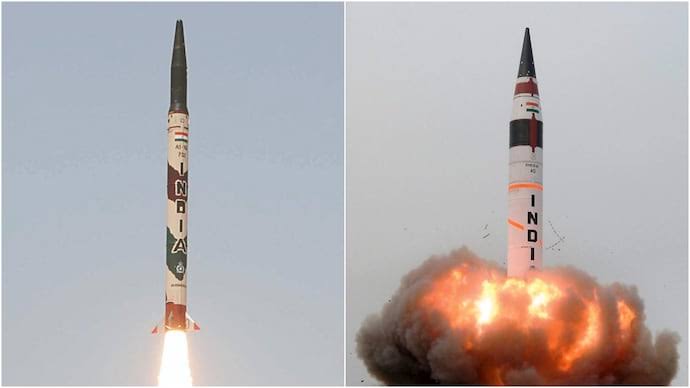
- 12 Mar 2024
Why is it in the News?
India on Monday announced the successful testing of an Agni missile capable of carrying multiple warheads meant to hit multiple targets simultaneously.
What are Agni-5 Missiles?
- Agni is a long-range missile developed indigenously by the Defence Research and Development Organisation, DRDO.
- The family of Agni missiles has been in the arsenal of the Indian armed forces since the early 1990s.
- This latest variant of the missile is equipped with what is known as MIRV (Multiple Independently Targetable Re-entry Vehicle) technology, first developed at least five decades ago but in possession of only a handful of countries.
Salient Features of Agni-5:
- Powered by a three-stage solid-fuel engine, Agni-5 boasts a range exceeding 5,000km.
- The Agni series encompasses medium to Intercontinental variants, spanning Agni-1 to Agni-5, with ranges varying from 700 km to over 5,000 km.
- DRDO’s successful June 2021 test of Agni P, a canisterized missile, demonstrated a range capability ranging between 1,000 and 2,000 km.
- With its ability to be launched from both road and rail platforms, Agni-5 ensures ease of deployment and swift launch capabilities.
What is MIRV Technology?
- The MIRV have revolutionized the concept of ballistic missile payloads by enabling a single missile to carry multiple warheads, each capable of targeting enemies at different locations.
- The technology was first introduced in the US with the successful test of the Minuteman III in 1968, which brought the technology into actual use in the 1970.
- The Soviet Union developed their own MIRV-enabled ICBM and SLBM technology by the end of the 1970s.
- The strategic shift started by MIRV has enabled many nations to greater target damage and reduce the effectiveness of enemy missile systems, altering the landscape of global nuclear deterrence.
- The warheads on MIRVs can be launched at different speeds and in different directions.
- Some MIRVed missiles can hit targets as far as 1,500 km apart.
- The technology requires a delicate combination of large missiles, small warheads, precise guidance, and a complex mechanism for releasing warheads sequentially during flight.
How does MIRV Work?
- The MIRV-equipped missile follows a trajectory into space similar to other ballistic missiles.
- After the boost phase, the missile’s upper stage, known as ‘bus’, reaches suborbital spaceflight, and aligns itself based on designated targets.
- The ‘bus’ sequentially deploys multiple warheads along with decoys and countermeasures.
- Each warhead can be assigned a different target or trajectory.
- After the deployment, the warheads re-enter the Earth’s atmosphere and proceed to their respective targets.
What are the Challenges?
- The MIRV technology enhances first-strike proficiency and complicates the calculus of mutual assured destruction.
- With the ability to deploy multiple warheads from a single missile, nations can achieve a broader spread of targets, making the defense system less effective and more costly.
- Although MIRVs were not initially made to defeat ballistic missile defenses, they are much more difficult to defend against than traditional missiles.
- Possession of MIRV technology not only exhibits a country’s nuclear prowess but plays a crucial role in shaping international security and nuclear deterrence strategies.
STPI launches 24th Centre of Entrepreneurship FinGlobe in Gandhinagar to nurture startups in fintech & banking services
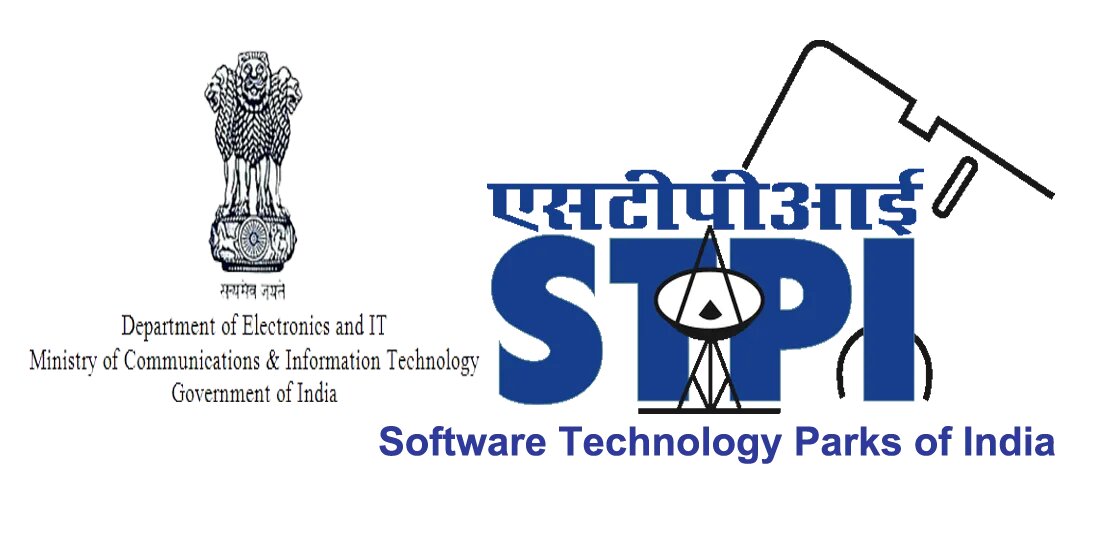
- 12 Mar 2024
Why is it in the News?
Software Technology Parks of India (STPI) recently launched its 24th Center of Entrepreneurship (CoE) - "FinGlobe," dedicated to fostering innovation and growth in the financial technology sector, at STPI-Gandhinagar, GIFT City.
About Software Technology Parks of India (STPI):
- Software Technology Parks of India (STPI) was set up in 1991 as an autonomous society under the Ministry of Electronics and Information Technology (MeitY).
- STPI’s main objective has been the promotion of software exports from the country. STPI acts as ‘single-window in providing services to the software exporters.
- The services rendered by STPI for the software exporting community have been statutory services, data communications services, incubation facilities, training and value-added services.
- STPI has played a key developmental role in the promotion of software exports with a special focus on SMEs and start-up units.
Services of STPI:
- Main services of STPI include Statutory services, Incubation and Data communication services to the IT/ITES/ESDM sector.
- Statutory services: STPI has been implementing the Software Technology Park (STP) scheme and the Electronics Hardware Technology Park (EHTP) scheme for the promotion of the IT/ITES industry.
- STP Scheme is a unique scheme, designed to promote the software industry and growth of start-ups and SMEs without any locational constraints.
- Incubation services: STPI is offering ultra-modern office facilities to small units and entrepreneurs.
- Plug-n-Play facilities for start-ups enable a short gestation period.
- This has encouraged many entrepreneurs to start their own operations and grow in a competitive environment.
Objectives of STPI:
- Promotion of software and software services development and exports, including IT Enabled Services (ITES)/Bio-IT.
- Provision of statutory and promotional services to exporters through the implementation of schemes like Software Technology Park/Electronics and Hardware Technology Park, among others.
- Offering data communication services, along with value-added services, to industries related to IT/ITES.
- Encouraging micro, small, and medium entrepreneurs by fostering an entrepreneurial environment in the IT/ITES sector.
. India ‘one of the worst autocratisers’: V-Dem report on democracy
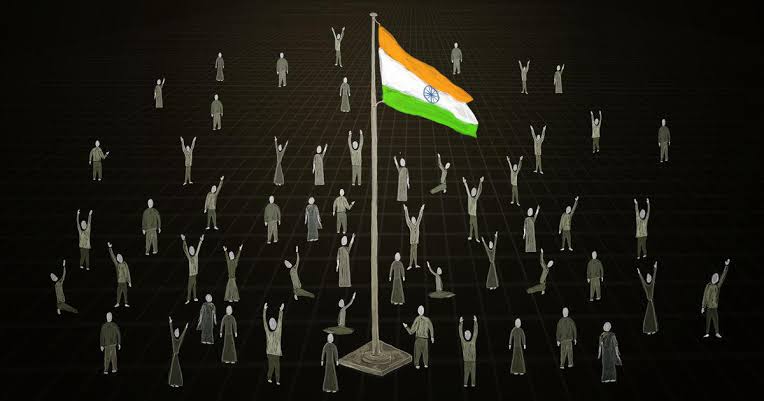
- 12 Mar 2024
Why is it in the News?
India, which was downgraded to the status of an “electoral autocracy” in 2018, has declined even further on multiple metrics to emerge as “one of the worst autocratizers”, according to the ‘Democracy Report 2024’ released by the Gothenburg-based V-Dem Institute that tracks democratic freedoms worldwide.
About V-Dem (Varieties of Democracy):
- The V-Dem Institute, established in 2014 by Swedish political scientist Staffan Lindberg, is a research institution dedicated to studying the various forms of democratic governance around the world.
- Headquartered at the University of Gothenburg in Sweden, V-Dem produces several high-profile datasets that assess the qualities of different governments based on hundreds of indicator variables.
- These datasets are widely used by political scientists due to their comprehensive coverage of various aspects of government and are freely available to the public.
- V-Dem's annual publications provide valuable insights into the functioning of governments worldwide, promoting transparency and understanding of democratic institutions.
About The Democracy Report:
- The Democracy Report presents a comprehensive analysis of the state of democracy worldwide, with a particular focus on the trends of democratization and autocratization.
- The report classifies countries into four distinct regime types based on their performance on the Liberal Democracy Index (LDI): Liberal Democracy, Electoral Democracy, Electoral Autocracy, and Closed Autocracy.
- The LDI is a composite index that encompasses both liberal and electoral dimensions of democracy.
- It is based on 71 indicators, which are grouped into the Liberal Component Index (LCI) and the Electoral Democracy Index (EDI).
- The LCI assesses various aspects of individual and minority rights, as well as legislative constraints on the executive.
- The EDI evaluates the extent to which elections are free and fair, considering factors such as freedom of expression and association.
- In addition to the LCI and EDI, the LDI also incorporates three other component indices:
- The Egalitarian Component Index (measuring social group equality)
- The Participatory Component Index (assessing the vibrancy of citizen groups and civil society organizations), and
- The Deliberative Component Index (evaluating whether political decisions are based on public reasoning or emotional appeals, solidarity attachments, and coercion).
- The Democracy Report, along with the underlying dataset, scientific articles, and working papers, is publicly available for download on the V-Dem Institute's website.
- The website also offers interactive graphic tools to facilitate the exploration and visualization of the data.
Key Insights from the Democracy Report 2024:
- The Democracy Report 2024, a collaborative effort involving 4,200 scholars from 180 countries, draws from 31 million datasets spanning 202 countries from 1789 to 2023.
Global Trends:
- In 2023, 42 countries (home to 35% of the world’s population) experienced autocratization.
- Autocracies now encompass 71% of the world's population, up from 48% a decade ago.
- The overall level of democracy has regressed to 1985 levels for the average global citizen.
- Eastern Europe, South, and Central Asia witnessed the most significant decline in democracy.
- Freedom of expression, clean elections, and civil society engagement were the most affected aspects in autocratizing nations.
Focus on 2024 Elections:
- Of the 60 countries holding elections in 2024, 31 are experiencing democratic backsliding.
India's Situation:
- India, classified as an electoral autocracy since 2018, has further deteriorated, earning the title of "one of the worst autocratizers."
- The report notes that India's level of liberal democracy has plummeted to levels comparable to those during the 1975 emergency declared by Indira Gandhi.
- Under the V-Dem classification, a liberal democracy requires robust mechanisms for judicial independence, checks on executive power, and strong protection of civil liberties and equality under the law.
- India currently falls into the category of electoral autocracy, characterized by multiparty elections but lacking adequate freedom of expression and fair electoral processes.
India launches revamped scheme to help advance pharma industry's tech capabilities

- 12 Mar 2024
Why is it in the News?
India's Department of Pharmaceuticals recently unveiled the Revamped Pharmaceuticals Technology Upgradation Assistance Scheme (RPTUAS) to help advance the technological capabilities of India's pharmaceutical industry and align it with global standards.
What is the Pharmaceuticals Technology Upgradation Assistance Scheme?
- In an effort to support pharma companies aligned with global quality standards, the Department of Pharmaceuticals (DoP) has announced a revamped Pharmaceuticals Technology Upgradation Assistance (RPTUAS) Scheme.
- It has been incorporated as a sub-scheme under the Scheme - Strengthening of Pharmaceutical Industry (SPI), which was launched in July 2022.
Objective:
- To facilitate Micro, Small and Medium Pharma Enterprises (MSME) of proven track record to upgrade their technology to meet WHO-GMP or Schedule M standards.
Intended Beneficiaries:
- Micro, Small and Medium Enterprises of the pharma sector.
Key Features of the Revised Scheme:
- Broadened Eligibility Criteria: Reflecting a more inclusive approach, eligibility for the PTUAS has been expanded beyond Micro, Small and Medium Enterprises to include any pharmaceutical manufacturing unit with a turnover of less than 500 crores that requires technology and quality upgradation.
- Preference remains for MSMEs, supporting smaller players in achieving high-quality manufacturing standards.
- Flexible Financing Options: The scheme introduces more flexible financing options, emphasizing subsidies on reimbursement basis, over traditional credit-linked approaches.
- Comprehensive Support for Compliance with New Standards: In alignment with revised Schedule-M and WHO- Good Manufacturing Practice (GMP) standards, the scheme now supports a broader range of technological upgrades.
- Eligible activities include improvements such as HVAC systems, water and steam utilities, testing laboratories etc.
- State Government Scheme Integration: The revised scheme allows integration with state government schemes, enabling units to benefit from additional top-up assistance. This collaborative approach aims to maximize support for the pharmaceutical industry in their technology upgradation efforts.
- The new benefit limit is based on turnover of the company. Units with less than Rs 5 crore turnover will get an incentive of 20 percent of investment under eligible activities.
- The units with turnover ranging from Rs 50 crore to less than Rs 250 crore will get an incentive of 15 percent of investment, while for those with turnover ranging from Rs 250 crore to less than Rs 500 crore, it will be 10 percent of investment under eligible expenses.
New sensor can detect 'forever chemicals' in drinking water
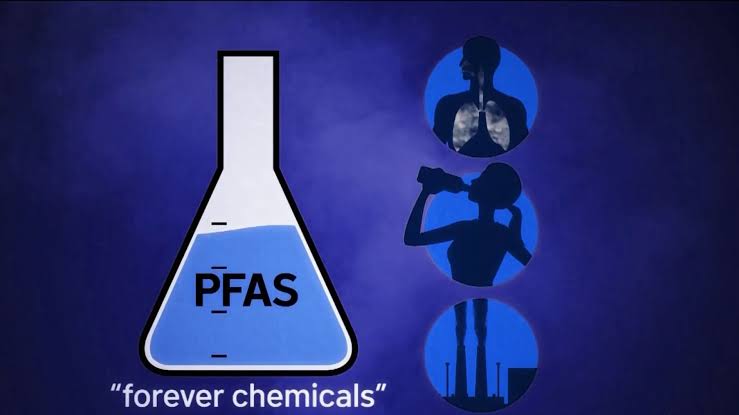
- 12 Mar 2024
Why is it in the News?
A team of chemists from the Massachusetts Institute of Technology (MIT) has designed a breakthrough method for the detection of perfluoroalkyl and polyfluoroalkyl substances (PFAS).
What are Per- and Polyfluoroalkyl substances (PFAS)?
- Per- and polyfluoroalkyl substances (PFAS) are a class of man-made chemicals that have been in use since the 1940s.
- Due to their unique properties, such as high chemical stability and resistance to heat, grease, and water, PFAS have been widely used in various industrial and commercial applications.
- They are commonly found in products such as stain- and water-resistant fabrics, cleaning products, paints, and fire-fighting foams.
- PFAS are often referred to as "forever chemicals" because they do not break down naturally in the environment.
- This is due to the strong carbon-fluorine bond that characterizes these compounds, making them highly persistent and resistant to degradation.
- The widespread use of PFAS has resulted in increasing levels of environmental contamination, with PFAS being detected in air, water, and soil samples worldwide.
- Exposure to these chemicals has been linked to a range of health risks, including decreased fertility, developmental effects in children, interference with body hormones, increased cholesterol levels, and an increased risk of certain cancers.
Due to their persistent nature and potential health risks, there is growing concern about the widespread use of PFAS and the need for improved regulation and remediation strategies to manage their environmental and health impacts.
- Environmental Persistence: Due to their strong carbon-fluorine bonds, PFAS do not break down easily in the environment.
- They can accumulate in soil, water, and living organisms, posing a long-term risk to ecosystems and human health.
- Bioaccumulation: PFAS can accumulate in living organisms, including humans, through the food chain.
- Even small amounts of PFAS in the environment can build up to harmful levels in animals and humans over time.
- Regulatory Action: Due to the potential health and environmental risks associated with PFAS, many countries are taking regulatory action to restrict their use and manage their environmental impacts.
- This includes banning certain PFAS-containing products, setting drinking water standards, and requiring the clean-up of contaminated sites.
MNRE to discuss specialized cylinders for hydrogen storage with stakeholders

- 11 Mar 2024
Why is it in the News?
The Ministry of New and Renewable Energy (MNRE) plans to convene a meeting with relevant stakeholders to discuss the development of specialized cylinders for green hydrogen storage.
What is Green Hydrogen?
- Green Hydrogen is produced through the process of electrolysis of water, utilizing electricity generated from renewable energy sources.
- The carbon intensity of green hydrogen depends on the carbon neutrality of the electricity source, with higher renewable energy content resulting in greener hydrogen.
- With its potential to decarbonize various sectors, reduce carbon emissions, and achieve energy independence, green hydrogen holds significant promise.
- Its production from renewable sources like solar, wind, and hydropower makes it a sustainable and environmentally friendly alternative to traditional fossil fuels in transportation and industry, offering a consistent and reliable energy source.
- Storage: Hydrogen is stored in cylinders at high pressure, categorized into four types based on materials used. Type 1 and Type 2 are suited for storage, while Type 3 is ideal for storage and transportation, and Type 4 is recommended for on-board storage.
- Unlike compressed natural gas (CNG) stored at around 3,600 psi, hydrogen is stored at 5,000-10,000 psi.
- Vehicles can utilize hydrogen either by burning it in an internal combustion engine or by using a fuel cell to convert it into electricity to charge on-board batteries.
- Type 3 and Type 4 cylinders are reinforced with carbon fiber, making them lightweight and suitable for vehicles.
- Type 4 cylinders, lined with a polymer instead of aluminum like Type 3, are even lighter.
Application of Green Hydrogen:
- Green hydrogen finds diverse applications, including powering vehicles and generating electricity through fuel cells.
- It also serves in heating systems and the production of chemicals and fertilizers.
- Additionally, green hydrogen supports microgrids, facilitating electricity provision to remote areas and fostering energy independence.
Advantages and disadvantages of green hydrogen:
- 100 % sustainable: Green hydrogen does not emit polluting gasses either during combustion or during production.
- Storable: Hydrogen is easy to store, which allows it to be used subsequently for other purposes and at times other than immediately after its production.
- Versatile: Green hydrogen can be transformed into electricity or synthetic gas and used for commercial, industrial or mobility purposes.
However, green hydrogen also has negative aspects that should be borne in mind:
- High cost: Energy from renewable sources, which are key to generating green hydrogen through electrolysis, is more expensive to generate, which in turn makes hydrogen more expensive to obtain.
- High energy consumption: The production of hydrogen in general and green hydrogen in particular requires more energy than other fuels.
- Safety issues: Hydrogen is a highly volatile and flammable element and extensive safety measures are therefore required to prevent leakage and explosions.
NHAI to start rolling out satellite-based tolling on national highways soon
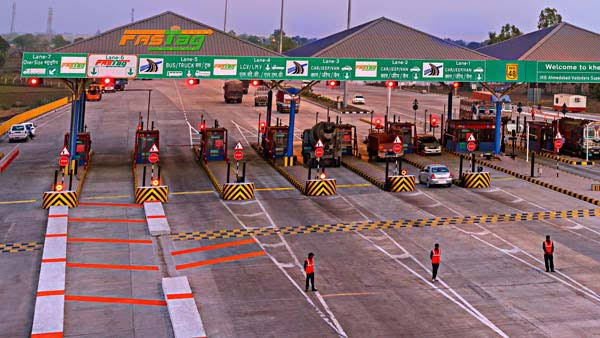
- 11 Mar 2024
Why is it in the News?
Road Transport and Highways Minister Nitin Gadkari said in Parliament in February that the government plans to implement a new highway toll collection system based on the global navigation satellite system before the model code of conduct for the 2024 election kicks in.
What is the Global Navigation Satellite System (GNSS)?
- GNSS refers to a constellation of satellites providing signals from space that transmit positioning and timing data to GNSS receivers.
- The receivers then use this data to determine location.
- Examples of GNSS include Europe’s Galileo, the USA’s GPS, Russia’s GLONASS and China’s BeiDou
How will the GNSS-Based Toll System work?
- The system will use an automatic number plate recognition (ANPR) system through cameras installed on highways and deduct tolls based on the distance traveled by a vehicle.
- The device monitors the movements while driving, accurately marking the entry and exit points on tolled segments. By analyzing travel distance, it computes the charges accordingly.
- This eliminates the uniformity of fixed tolls at booths, ensuring fairness for drivers traversing shorter distances.
Difference between FASTags and ANPR technology:
- FASTags streamline electronic toll payments at toll plazas equipped with scanners, enabling vehicles to pass through without stopping.
- Conversely, GNSS-based systems utilize ANPR technology to deduct tolls based on distance traveled, rendering traditional toll plazas unnecessary.
What are the Challenges?
- Detection of Non-Compliance: Without physical barriers, detecting non-compliant vehicles, such as those without an On-Board Unit (OBU) or engaging in fraudulent activities, poses a challenge.
- Infrastructure Requirements: Deploying gantry-mounted Automatic Number-Plate Recognition (ANPR) systems along highways is essential for capturing violations and enforcing toll payments.
- License Plate Quality: The effectiveness of ANPR systems relies on the quality of license plates; subpar plates hinder accurate recognition and enforcement efforts.
- Data Privacy and Security: GNSS-based toll systems entail collecting and processing sensitive location data, necessitating robust privacy and security measures.
Inflection AI rolls out new large language model to its Pi chatbot

- 11 Mar 2024
Why is it in the News?
Recently, Inflection AI launched its latest LLM, Inflection 2.5, an upgrade to its model that powers its friendly chatbot Pi personal assistant.
About Inflection 2.5:
- Inflection-2.5 is an “upgraded in-house model that is competitive with all the world’s leading LLMs like GPT-4 and Gemini.
- The newly upgraded LLM comes with its signature personality and uniquely empathetic fine-tuning.
- Its latest model achieved GPT-4’s performance with only 40 per cent of the OpenAI model’s computation power for training.
- Besides, it seems Inflection 2.5 has made some stellar strides in areas of IQ such as coding and mathematics.
- This means that the model has made substantial improvements on key benchmarks.
- With the new upgrade, Pi has now been endowed with world-class real-time web search capabilities to ensure that users get access to high-quality and up-to-date information in real-time.
What is the Pi chatbot?
- Pi is an advanced chatbot powered by Inflection AI's cutting-edge language model, Inflection 2.5 which allows one to have deep and meaningful conversations.
- To access the chatbot, one needs to log on to Inflection.AI, click on Meet Pi, and simply start talking to the chatbot right away.
- Pi is more humane and has been promoted as a chatbot that has a personality.
- In other words, Inflection AI dubbed it as a chatbot that is “supportive, smart, and there for you anytime”.
- Pi is more like a companion to humans and is free to use.
- The chatbot comes with a voice, in six distinct voices, to choose from adding life to conversations.
Pi chatbot boasts a number of impressive features that make it stand out from other conversational AI systems:
- Real-time web search capabilities: Pi can access and present up-to-date information on a wide range of topics, ensuring that users always have access to accurate and relevant information.
- Empathetic personality: Pi's unique empathetic fine-tuning allows it to understand and respond to the emotional nuances of human communication, making it a more engaging and personable conversational partner.
- Versatile conversation topics: Whether you're discussing current events, asking for local recommendations, studying for an exam, drafting a business plan, coding, or just talking about hobbies, Pi is equipped to handle a wide range of conversational topics.
- User-friendly interface: Designed with accessibility in mind, Pi's intuitive interface makes it easy for users of all technical abilities to engage with the chatbot and get the most out of their conversations.
Health ministers of 11 African countries commit to end malaria deaths
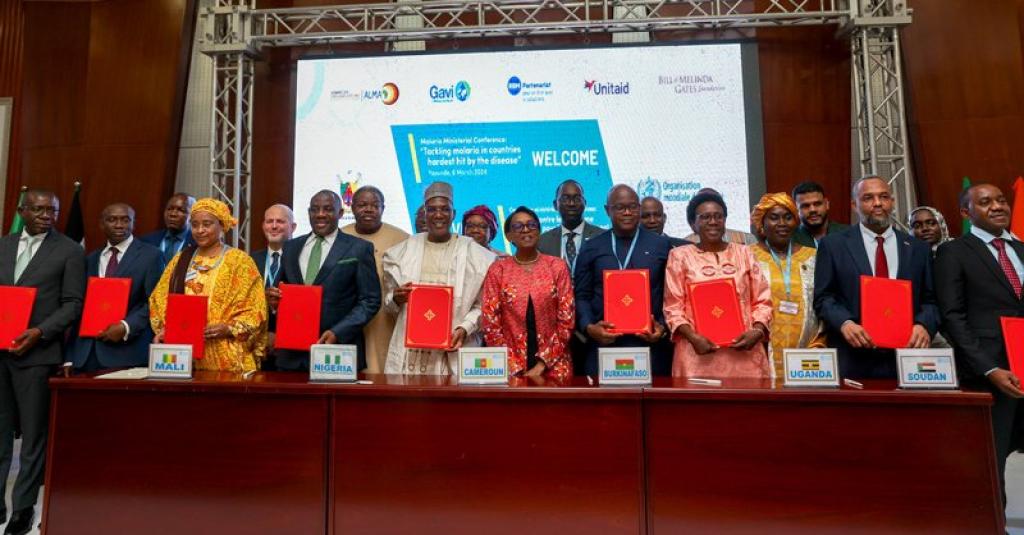
- 11 Mar 2024
Why is it in the News?
In a historic gathering in Cameroon’s capital Yaoundé, African health ministers, global malaria partners, funding agencies, scientists, civil society organizations and other principal malaria stakeholders pledged to end malaria deaths, especially given the tools and systems available.
What is the Yaounde Declaration?
- The Yaounde Declaration was endorsed by health ministers from 11 African nations with the highest malaria burden, aiming to expedite efforts to eliminate malaria-related deaths.
- Signed during the Yaoundé conference, co-hosted by the World Health Organization (WHO) and the Government of Cameroon, the declaration underscores a collective commitment to combat malaria.
- The signatory countries include Burkina Faso, Cameroon, the Democratic Republic of the Congo, Ghana, Mali, Mozambique, Niger, Nigeria, Sudan, Uganda, and Tanzania, together accounting for approximately 70% of the global malaria burden.
- Commitments entail stronger leadership and increased domestic funding for malaria control programs, leveraging data technology, adhering to updated technical guidance, and intensifying efforts at national and sub-national levels.
- Ministers pledged augmented health sector investments to fortify infrastructure, personnel, and program implementation, fostering multi-sectoral collaboration, and cultivating partnerships for funding, research, and innovation.
- Signatories affirmed their resolute dedication to hasten malaria mortality reduction and to ensure mutual accountability for the declaration's outlined commitments.
Current Status of Malaria:
- Between 2019 and 2022, global malaria cases increased from 233 million to 249 million, with Africa experiencing a substantial rise from 218 million to 233 million cases, highlighting the continent as the epicenter of the malaria crisis.
- The 11 African countries represented at the conference bear the highest burden of malaria infections and deaths.
Progress and Challenges:
- Despite some progress, malaria incidence has only declined by 7.6% and mortality by 11.3%, falling short of the African Union’s interim goals.
- Only seven out of 46 member states have achieved a 40% reduction in malaria incidence or mortality.
- Urgent action is imperative to bridge a financial gap of $1.5 billion to sustain basic malaria services, especially for vector control.
- Additional funding of $5.2 billion annually for progress towards elimination and $11 billion for climate adaptation in the health sector is crucial to avert significant surges in cases and deaths, particularly among vulnerable populations like children and pregnant women.
UGC notifies framework for private universities to set up off-campus centers
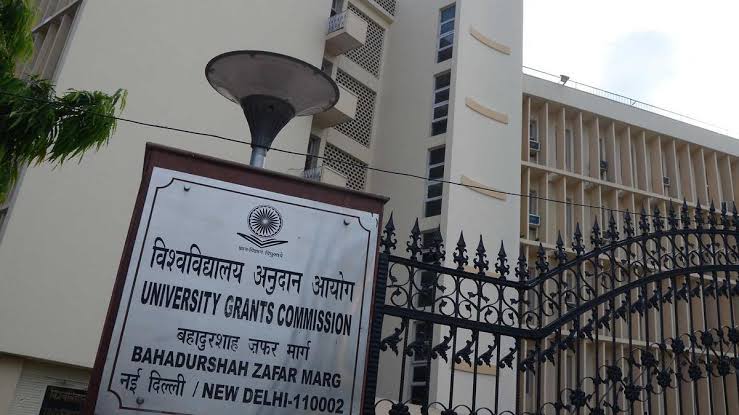
- 11 Mar 2024
Why is it in the News?
In line with the “future academic vision” instead of “commercial interests”, the UGC has notified modalities on March 6 for state private universities to set up off campus centers within their respective states.
News Summary:
- The University Grants Commission (UGC) recently permitted private universities to establish off-campus centers and outlined regulations for the same.
- Previously, private universities in the country were restricted from opening off-campus centers in other states.
- In a meeting held on March 5, the UGC decided to authorize state private universities to establish off-campus centers across the country, provided they meet specific criteria.
- Criteria include a minimum of five years of establishment and accreditation from the National Assessment and Accreditation Council (NAAC), without requiring an A or B grade.
- Universities seeking to establish off-campus centers must meet staff, infrastructure, and financial requirements mandated by the commission and obtain approvals from statutory and regulatory bodies.
- These universities must ensure the provision of infrastructure, faculty, and courses offered at the main campus to students at their off-campus centers.
- A one-time establishment fee of Rs 10 lakh is required to be paid to the UGC by the universities.
- The UGC reserves the right to conduct inspections and take punitive actions against universities in case of irregularities or complaints.
- Additionally, the UGC may order the closure of a university’s off-campus center for violations, with the university responsible for relocating affected students to the main campus.
About University Grants Commission (UGC):
- The University Grants Commission (UGC) of India operates as a statutory body established under the UGC Act, 1956.
- Its primary mandate encompasses coordinating, determining, and upholding standards within higher education institutions across India.
- UGC holds the authority to grant recognition to universities and colleges within the country and allocates funds to these recognized institutions.
- Nodal Ministry: Department of Higher Education, Ministry of Education.
Mandate of UGC:
- Facilitating and coordinating university education initiatives.
- Establishing and maintaining standards in teaching, examination, and research activities within universities.
- Formulating regulations to define minimum education standards.
- Monitoring advancements in collegiate and university education while disbursing grants to these institutions.
- Serving as a crucial intermediary between the Union and State governments and higher education institutions.
- Providing advisory services to the Central and State governments concerning measures aimed at enhancing university education standards.
Conclusion
Academic experts said that this decision may prove beneficial for students as they will get more options to choose from. However, it also means that the 16 government-run universities in the state will face more competition. More students may shift to these centers, leaving a large number of approved seats in the public universities vacant every year.
India to restart Penicillin G manufacture

- 09 Mar 2024
Why is it in the News?
India will start manufacturing the common antibiotic Penicillin G later this year, three decades after the country’s last plant shut down, Union health minister Mansukh Mandaviya announced last week.
What is Penicillin G?
- Penicillin G serves as a key active pharmaceutical ingredient (API) utilized in the production of various common antibiotics.
- Its molecular formula is C16H18N2O4S.
- Penicillin G (potassium or sodium) is an FDA-approved antibacterial medication primarily indicated for treating severe bacterial infections like pneumonia, meningitis, gonorrhea, syphilis, among others.
- This natural penicillin antibiotic is typically administered intravenously or intramuscularly due to limited oral absorption.
- Additionally, Penicillin G may be employed in certain instances as prophylaxis against susceptible organisms.
Why did Penicillin Manufacturing Stopped in India?
- The discontinuation of Penicillin G production in India, along with numerous other active pharmaceutical ingredients (APIs), resulted from the influx of cheaper Chinese products driven by subsidies.
- Torrent Pharma in Ahmedabad was the final plant to halt Penicillin G production, with at least five companies, including Torrent, manufacturing the antibiotic in the country during the 1990s.
- In the early 1990s, India boasted nearly 2,000 API manufacturers, while approximately 10,000 units produced formulations. However, the allure of cheaper Chinese alternatives grew, particularly with the relaxation of customs rules during the country's economic liberalization.
- The Drug Prices Control Order, which imposed price caps on essential medicines, further incentivized companies to opt for cheaper imported products.
- While India previously sold Penicillin G for around Rs 800 per kg, China drastically reduced prices to nearly Rs 400 per kg, rendering domestic manufacturing economically unviable.
Why the Delay in Restarting Production?
- Lack of Urgency: Despite awareness within the industry and government about the decline in API production in India due to the availability of cheaper alternatives globally, there was limited emphasis on restarting domestic production.
- The supply chain disruptions caused by the pandemic highlighted the need for self-reliance, prompting the government to launch initiatives like the PLI scheme to bolster domestic manufacturing.
- High Initial Investment: API manufacturing, particularly for fermented compounds like Penicillin G, entails significant upfront costs.
- Establishing a production facility requires substantial capital investment, with companies often needing several years to break even.
- Dominance of China: China has emerged as a dominant supplier, significantly expanding its manufacturing capacity over the past three decades.
- Competing with Chinese prices would necessitate substantial investments in larger facilities.
What's the Impact of PLI Schemes?
- Reduction in API Imports: Since the implementation of the PLI scheme, there has been a notable decrease in API imports.
- For instance, the import dependency for paracetamol, which was previously two-thirds of the required volume, has now halved.
- Incentive Structure: The PLI scheme offers incentives structured as follows:
- 20% support for the first four years, gradually reducing to 15% in the fifth year and 5% in the sixth year for eligible sales of fermentation-based bulk drugs like antibiotics, enzymes, and hormones such as insulin.
- Chemically synthesized drugs receive a 10% incentive for six years on eligible sales.
The ‘Architecture Nobel’: Why Pritzker laureate Riken Yamamoto’s work stands out

- 09 Mar 2024
Why is it in the News?
Japanese architect Riken Yamamoto was this week declared winner of the 2024 Pritzker Architecture Prize, the highest international award in the field, which is sometimes referred to as the “Architecture Nobel”.
About Pritzker Architecture Prize:
- The Pritzker Architecture Prize is an international prize awarded each year to a living architect or a group of architects for significant achievements.
- It was established by the Pritzker family of Chicago in 1979 through their Hyatt Foundation, which until today is responsible for the prestigious award.
- The idea behind the Pritzker Prize is to honor contemporary architects “whose built work demonstrates a combination of those qualities of talent, vision, and commitment, which has produced consistent and significant contributions to humanity and the built environment through the art of architecture.”
- The award consists of a bronze medallion and a prize money of 100,000 USD.
- It is conferred during a ceremony held at an architecturally significant site throughout the world.
- The prize, which is also known as the Nobel Prize of architecture, is awarded “irrespective of nationality, race, creed, or ideology”.
- Nominations come from a range of architects, academics, and critics and the jury consists of five to nine experts.
History of the Prize:
- The idea for the Pritzker Prize came from Jay and Cindy Pritzker, who wanted to encourage and stimulate a greater public awareness of architecture, while also inspiring more creativity in the profession.
- The name Pritzker comes from the family who are based in Chicago and own the Hyatt Hotels.
Riken Yamamoto's Notable Works:
- Yamamoto, the ninth laureate from Japan, is known for his iconic architectural designs, such as the Hiroshima Nishi Fire Station (2000), featuring a transparent façade with glass walls and floors, offering passersby a glimpse inside.
- His design of the Koyasu Elementary School (2018) incorporates spacious, open terraces that facilitate arts education in dance, music, and painting while fostering student interaction.
Every village to have agricultural credit societies by 2027

- 09 Mar 2024
Why is it in the News?
Union Cooperation Minister Amit Shah Friday said that the Centre has decided to ensure formation of Primary Agricultural Credit Societies (PACS) in every village by 2027.
Context:
- Union Cooperation Minister Amit Shah recently announced the Centre's commitment to establishing Primary Agricultural Credit Societies (PACS) in every village by 2027, introducing 20 new activities to enhance their profitability.
- Emphasizing the significance of computerization in PACS, Shah highlighted its role in fostering development opportunities.
- He also inaugurated the National Cooperative Database and unveiled the 'National Cooperative Database 2023: A Report' to bridge existing gaps through comprehensive analysis.
- The database initiative progressed through three phases, including mapping approximately 2.64 lakh societies across agriculture, dairy, and fisheries sectors in the first phase.
- Subsequent phases involved data collection from various federations, banks, and mapping of the remaining 8 lakh primary cooperative societies in other sectors.
- The unveiling revealed over 8 lakh registered societies in the country, connecting more than 30 crore citizens.
What are Primary Agricultural Credit Societies (PACS)?
- PACS are grassroots cooperative credit societies, constituting the final tier in a three-tier cooperative credit system led by State Cooperative Banks (SCBs) at the state level.
- SCBs channel credit to District Central Cooperative Banks (DCCBs) operating at the district level, which collaborate with PACS, directly serving farmers.
- PACS operate as cooperative entities, with individual farmers as members and elected office-bearers from within the community. Villages may host multiple PACS.
- These societies extend short-term and medium-term agricultural loans to farmers for various farming activities.
Number of PACS in India:
- Established since 1904, India currently boasts over 1,00,000 PACS nationwide, engaging a significant member base exceeding 13 crore farmers.
- However, operational PACS stand at only 63,000, indicating the need for enhanced functionality and outreach.
Why are PACS Appealing?
- PACS offer crucial last-mile connectivity, ensuring farmers have access to capital at the onset of agricultural activities.
- They streamline credit extension processes, providing farmers with timely financial support with minimal paperwork, unlike traditional banks known for cumbersome procedures.
- PACS simplify paperwork and administrative tasks, offering farmers collective strength and assistance from PACS office-bearers.
- Unlike individual interactions required with commercial banks, PACS enable farmers to navigate loan processes collectively, reducing reliance on intermediaries.
Challenges Faced by PACS:
- Political influences often overshadow financial prudence within PACS, impacting loan recovery.
- Various committees have highlighted systemic issues within the cooperative system, including low member participation, lack of professionalism, inadequate governance, bureaucratic hurdles, and a workforce with aging and disengaged employees.
Union Cabinet approves India AI Mission with 10,372 cr outlay
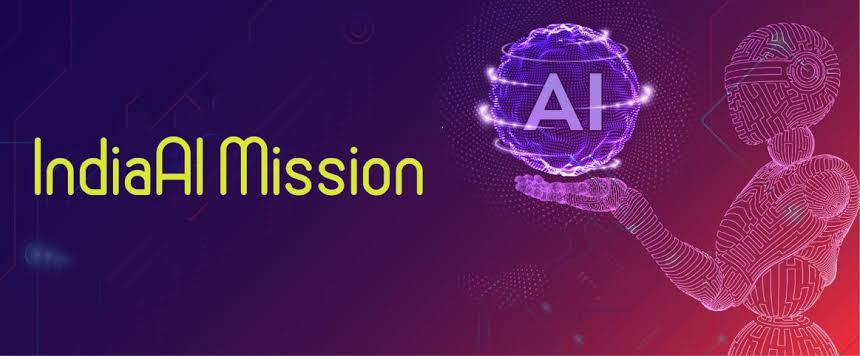
- 08 Mar 2024
Why is it in the News
India has made its first move to address a key shortcoming it currently has in unlocking opportunities around generative artificial intelligence (AI) – that of computing hardware.
What is IndiaAI Mission?
- India's AI Mission entails the launch of an artificial intelligence (AI) initiative, announced by the Prime Minister at the Global Partnership on Artificial Intelligence (GPAI) Summit 2023 in New Delhi, with implementation overseen by the 'IndiaAI' Independent Business Division (IBD) under Digital India Corporation (DIC).
- Led by the Ministry of Electronics and IT (MeitY), the mission aims to establish a computing capacity exceeding 10,000 graphics processing units (GPUs) and develop foundational models trained on datasets encompassing major Indian languages, focusing on priority sectors such as healthcare, agriculture, and governance.
- Additionally, the mission will involve the establishment of AI Curation Units (ACUs) in 50-line ministries and the creation of an AI marketplace to provide AI services and pre-trained models to AI application developers.
- Implementation of the AI computer infrastructure will follow a public-private partnership model, with 50% viability gap funding, with Rs 4,564 crore allocated from the total outlay of Rs 10,372 crore for building computing infrastructure.
Key Features of the IndiaAI Mission:
- IndiaAI Compute Capacity: Establishing a scalable AI computing ecosystem to meet the growing demands of India's burgeoning AI start-ups and research community.
- IndiaAI Innovation Centre: Focusing on the development and deployment of indigenous Large Multimodal Models (LMMs) and domain-specific foundational models in critical sectors.
- IndiaAI Datasets Platform: Streamlining access to high-quality non-personal datasets to fuel AI innovation.
- IndiaAI Application Development Initiative: Promoting the adoption of AI applications in critical sectors, addressing problem statements sourced from Central Ministries, State Departments, and other entities.
- IndiaAI FutureSkills: Mitigating barriers to entry into AI programs by expanding AI courses at undergraduate, master's, and Ph.D. levels.
- IndiaAI Startup Financing: Supporting and accelerating deep-tech AI startups by providing streamlined access to funding for futuristic AI projects.
- Safe & Trusted AI: Ensuring the responsible implementation of AI projects through the development of indigenous tools and frameworks to foster trust and safety in AI applications.
The Significance of the IndiaAI Mission:
- The IndiaAI Mission aligns with the vision of fostering indigenous AI development and leveraging AI technology for the benefit of India.
- It aims to demonstrate to the international community the positive impact of AI technology on society, thereby enhancing India's global competitiveness.
- By establishing a comprehensive ecosystem for AI innovation through strategic partnerships across public and private sectors, the mission will catalyze AI-driven advancements.
- It will foster creativity and bolster internal capabilities, ensuring India's technological sovereignty.
- Furthermore, the mission is poised to create employment opportunities that demand advanced skills, leveraging India's demographic advantage.
After 10 years struggle, Mendha gets separate Panchayat status under Gramdan Act
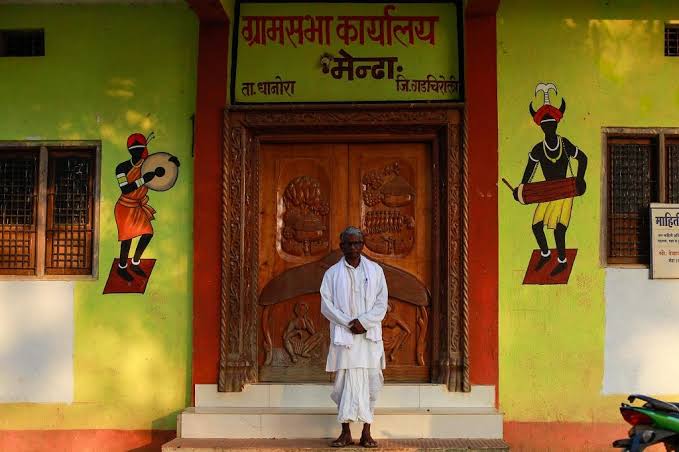
- 08 Mar 2024
Why is it in the News
The Maharashtra government recently notified Mendha, a village deep inside the forests of the state’s Gadchiroli district, as a separate Gram Panchayat under The Maharashtra Gramdan Act, 1964.
What is Gramdan?
- Gramdan is an expansion of the Bhoodan Movement started in 1951 by Aacharya Vinoba Bhave.
- ‘Bhoodan’ meant redistribution of land from bigger landowners to the landless.
- Under Gramdan, the entire village will put its land under a common trust.
- This way, the land will not be sold outside the village or to one who has not joined Gramdan in the village.
- But the landowners can continue to cultivate it and reap the benefits.
- The Movement paved the way for the protection of natural resources by giving equal rights and responsibilities to everyone in the community and empowering communities to move towards self-governance.
- Under the Act, at least 75 percent of landowners in the village should surrender land ownership to the village community for it to be declared as ‘gramdan’.
- Such land should at least be 60 percent of the village land. Five per cent of the surrendered land is distributed to the landless in the village for cultivation.
- Recipients of such land cannot transfer the same without the permission of the community.
- The rest remains with the donors.
- They and their descendants can work on it and reap the benefits.
- But they cannot sell it outside the village or to a village resident who has not joined Gramdan.
- Today, seven states in India have 3,660 Gramdan villages, the highest being in Odisha (1,309).
- The states are Andhra Pradesh, Bihar, Maharashtra, Odisha, Rajasthan, Tamil Nadu and Uttar Pradesh.
- In September 2022, the Assam government repealed the Assam Gramdan Act, 1961 and Assam Bhoodan Act, 1965, bypassing The Assam Land and Revenue Regulation (Amendment) Bill, 2022.
- This, it said, was done to counter encroachment on donated lands in the state.
- Till that time, Assam had 312 Gramdan villages.
About Mendha’s Village Struggle:
- The village, comprising around 500 Gond Adivasis, has fought for its forests for years.
- It is popular as the first village in India to secure community forest rights (CFR), following the passing of the Scheduled Tribes and Other Traditional Forest Dwellers (Recognition of Forest Rights) Act, 2006.
- Some 80 per cent of the area in the village is covered with dense forest.
- People here believe that land is not a private property but a collective resource that provides food and livelihood and should be saved and passed on to the next generation.
- All villagers in Mendha have surrendered their land, which is unique. In all other villages, only about 75-80 per cent of landowners had agreed to do so.
- The village fulfilled these conditions of the Act in 2013 and notified the district collector about its decision to implement the Act.
Amit Shah launches National Cooperative Database, to help in policy making
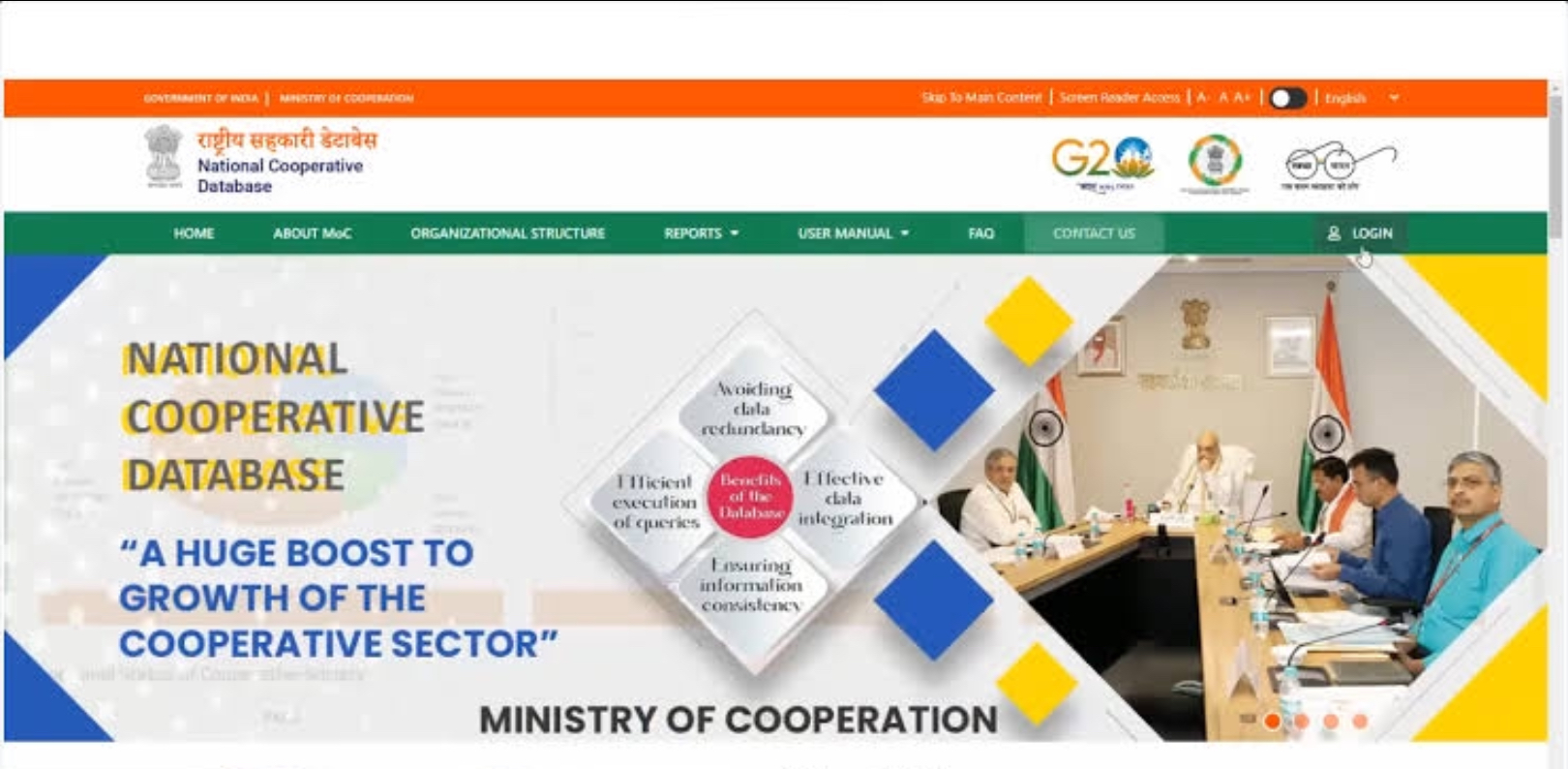
- 08 Mar 2024
Why is it in the News
Cooperation Minister Amit Shah on Friday launched the National Cooperative Database and stressed that it would help in policy making.
About National Cooperative Database (NCD):
- The National Cooperative Database (NCD) is an initiative spearheaded by the Ministry of Cooperation, responding to the pressing need for a robust database to effectively capture essential information concerning India's extensive cooperative sector.
- Developed collaboratively with State Governments, National Federations, and stakeholders, the NCD is designed to promote a cooperative-centric economic model, offering a web-based digital dashboard for seamless data management.
- Acting as a centralized repository, the NCD aggregates data from cooperative societies, including National/State Federations, with information entered and authenticated by nodal officials at RCS/DRCS offices for cooperative societies and provided by various national/state federations for federations.
- The collected data encompasses diverse parameters, such as registered names, locations, membership numbers, sectoral details, operational areas, financial statements, audit statuses, and more, providing a comprehensive overview of the cooperative landscape.
- Serving as a vital communication tool, the NCD facilitates efficient interaction between the Central Ministry, States/UTs, and Cooperative Societies, fostering collaboration and synergy within the cooperative sector.
- Key features and benefits of the NCD include single-point access, comprehensive and updated data, user-friendly interface, vertical and horizontal linkages, query-based reports and graphs, Management Information System (MIS) reports, data analytics, and geographical mapping capabilities.
Kerala declares man-animal conflict a state-specific disaster
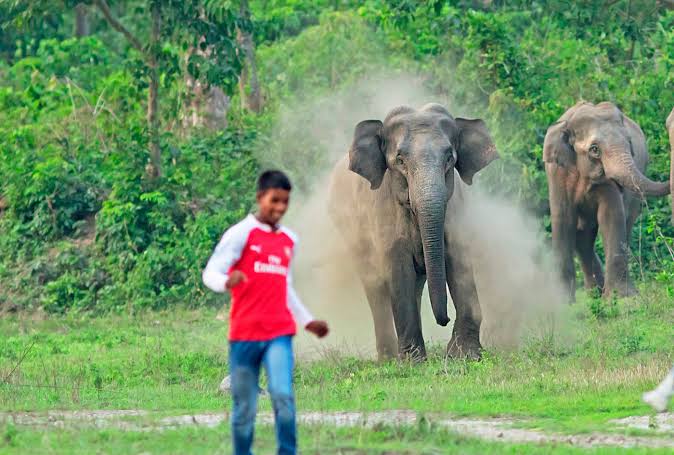
- 08 Mar 2024
Why is it in the News?
Amid repeated deaths from animal attacks and rising anger over them, Kerala recently declared man-animal conflict as a state-specific disaster, becoming the first state in the country to do so.
What is Man-animal Conflict?
- Man-animal conflict refers to the interaction between wild animals and humans, resulting in adverse outcomes for both people and wildlife, as well as their habitats.
- Escalating Conflict: In states across India, human-wildlife conflict has intensified, leading to a significant rise in human casualties.
- For instance, in Maharashtra, the conflict resulted in 86 in 2021 and 105 deaths in 2022, marking a sharp increase compared to previous decades.
Causes:
- Factors contributing to this conflict include the encroachment of grodeathswing human and animal populations into each other's territories, habitat fragmentation due to legal and illegal land use changes, alterations in cropping patterns attracting wildlife to agriculture, and habitat destruction from invasive alien species.
- Despite having over 700 protected areas, a substantial portion of elephant, lion, and tiger ranges lie outside these protected zones, exacerbating the conflict.
Ecologist Perspective:
- Ecologist Madhav Gadgil highlights that the Wildlife Protection Act of 1972 has inadvertently facilitated an environment where wild animals can invade human habitats with impunity.
- He cites the optimal foraging theory in ecology, which underscores animals' efforts to maximize nutrient intake while minimizing time, effort, and risks.
Solutions:
- Addressing the issue requires robust enforcement and pragmatic policies to mitigate conflict incidences.
- Engaging local communities, as suggested by the Future for All Report 2021 (by WWF and UNEP), fosters coexistence between humans and wildlife, acknowledging that complete elimination of conflicts is impractical.
- Additionally, awareness campaigns aimed at educating the public about man-animal conflict and skill development initiatives for communities living near forests can alleviate pressures on agricultural and forest lands.
Kerala's Decision to Declare Man-Animal Conflict as a State-Specific Disaster:
- Implications of the Decision: Currently, the management of man-animal conflict falls under the jurisdiction of the forest department, operating in accordance with the Wildlife Protection Act.
- By designating man-animal conflict as a state-specific disaster, the responsibility for addressing it shifts to the state disaster management authority, empowered by the Disaster Management Act, enabling swifter and more decisive action.
- Rationale for the Decision: Instances of loss of life due to man-animal conflict have prompted calls to tranquilize, capture, or eliminate the responsible animals.
- Presently, the chief wildlife warden, holding the sole authority in the state, makes decisions regarding wild animals causing disturbances in human settlements.
- Past decisions to tranquilize aggressive animals, like wild elephants, have faced legal challenges.
- Under the disaster management authority, actions can be taken that supersede other regulations, including those outlined in the Wildlife Protection Act.
- According to the Disaster Management Act, except for the Supreme Court or a High Court, no court has jurisdiction to entertain suits or proceedings regarding actions taken by relevant authorities in line with the Act.
- Additionally, the Act stipulates that its provisions hold precedence over any other law during the specific period of a declared disaster.
Kerala's Success in Managing Man-Animal Conflict:
- Kerala, with approximately 5,700 wild elephants in 2017, comprising 19% of the nationwide population of 30,000, witnessed a significantly lower incidence of human fatalities caused by elephants, accounting for only 81 (4%) of the 2,036 deaths recorded in India between 2018 and 2021.
- Factors Contributing to Kerala's Effective Management of Man-Animal Conflict:
- Maintenance of Unchanged Wilderness Boundaries: Kerala has largely preserved the boundaries between wilderness and civilization in recent years, contributing to the mitigation of man-animal conflicts.
- Evolution of Agricultural Practices: Changes in agricultural practices, such as the cultivation of crops like coffee, pepper, and tea, which hold less appeal for elephants, have helped reduce conflicts between humans and elephants.
- Unique Elephant Characteristics: Individual elephants are identified and named based on their distinct characteristics, such as Kabali, an elephant residing in the Athirapally jungle in Thrissur district, known for its tendency to attack or chase automobiles.
- These factors collectively contribute to Kerala's successful management of man-animal conflict, resulting in relatively fewer human fatalities caused by elephants compared to other regions in India.
Countries hope to bring BBNJ or High Seas treaty into force by 2025
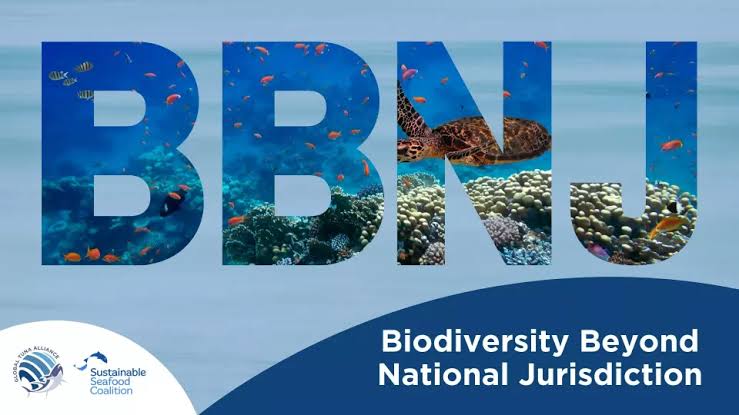
- 08 Mar 2024
Why is it in the News
The Blue Leaders High-Level Event on Biodiversity Beyond National Jurisdiction was held in Belgium on March 7, 2024, to urge nations to ratify a new treaty to protect the high seas from pollution, climate change and overfishing.
What is the BBNJ Treaty?
- The BBNJ Treaty, also referred to as the Treaty of the High Seas, is an international agreement aimed at conserving and sustainably managing marine biological diversity in areas beyond national jurisdiction, operating within the framework of the UNCLOS.
- These areas encompass the high seas beyond exclusive economic zones or national waters.
- It represents nearly half of the Earth's surface and is characterized by minimal regulation and understanding of their biodiversity, with only 1% currently under protection.
- Launched at the One Ocean Summit in February 2022, the High Ambition Coalition on Biodiversity Beyond National Jurisdiction seeks to unite various delegations involved in BBNJ negotiations toward a comprehensive and ambitious outcome.
- The negotiations focus on key elements agreed upon in 2015, including the conservation and sustainable use of marine genetic resources, area-based management tools such as marine protected areas, environmental impact assessments, and initiatives for capacity-building and technology transfer in marine science and management.
- India is yet to sign the treaty. However, it called on efforts for entry into force and implementation of the treaty at the G20 New Delhi Leaders’ Declaration held in September 2023.
The Importance of a Legally Binding Instrument for BBNJ:
- Biodiversity in areas beyond national jurisdiction is crucial for ocean health, coastal communities' welfare, and global sustainability, constituting 95% of the ocean and offering essential ecological, economic, social, cultural, scientific, and food-security benefits.
- Despite their significance, these areas face escalating threats such as pollution, overexploitation, and the impacts of climate change, compounded by the anticipated rise in demand for marine resources in the future.
- Even the deep seafloors, considered one of the most inhospitable habitats, are experiencing the onset of extinction processes, with alarming statistics showing that 62% of assessed mollusc species are threatened, including critically endangered, endangered, and vulnerable species, while the International Seabed Authority permits deep sea mining contracts.
- It is imperative to establish a legally binding framework for managing and regulating biodiversity in areas beyond national jurisdiction, as over 60% of this resource in the global seas remains unmanaged and unprotected, necessitating comprehensive conservation measures.
ISRO’s second rocket launchport in Tamil Nadu’s Kulasekarapattinam
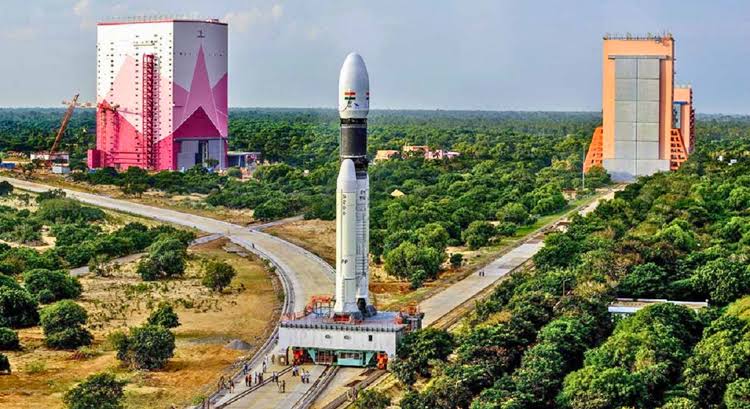
- 07 Mar 2024
Why is it in the News?
Prime Minister Narendra Modi laid the foundation stone of the second rocket launchport of the Indian Space Research Organisation (ISRO) at Kulasekarapattinam on February 28.
Why does India need a new launchport?
- With the Union government’s recent policy announcing the opening of the space sector to private players, a sharp rise in the number of commercial launches is certain.
- To ensure that ISRO’s first launchport, the Satish Dhawan Space Centre (SDSC) SHAR in Sriharikota, is not overburdened with a high number of launches, the space agency has decided to build another facility.
- While SHAR will be only used for launching bigger and heavy-lift-off missions, the Kulasekarapattinam launchport will be used to launch smaller payloads.
- SHAR will also be available for India’s big ticket missions to the Moon, Venus, and much touted human-flight mission, the Gaganyaan.
- Private players could develop space-qualified sub-systems, build satellites, and even launch vehicles using the new launchport.
- It will also facilitate dedicated launch infrastructure for all the on-demand commercial launches.
Why is the new ISRO launchport located in Tamil Nadu?
- Geographically, scientifically, and strategically, the Kulasekarapattinam launchport provides a natural advantage to ISRO’s future launches pertaining to the Small Satellite Launch Vehicle (SSLV).
- Allowing a direct southward and smaller launch trajectory for the light weight SSLVs carrying less fuel, the Kulasekarapattinam facility will boost ISRO’s attempts to enhance payload capacities.
- Currently, the trajectory followed by all launches from SHAR are longer as they follow a path which requires the vehicle to skirt eastwards around Sri Lanka before taking the actual southward flight.
- This consumes additional fuel. However, the same would not be required for future launches from Kulasekarapattinam, which is geographically located several kilometers to the west of Colombo, thereby allowing a straight southward flight and simultaneously saving the already limited fuel available onboard SSLV.
- Notably, both the launch ports are located in Southern India, near the equator.
- For a launch site close to equator the magnitude of the velocity imparted due to Earth’s rotation is about 450 m/s, which can lead to substantial increase in the payload for a given launch vehicle.
- Geostationary satellites must necessarily be in the equatorial plane.
- So, for such satellites, the closer the launch site is to the equator the better it is.
What are SSLVs?
- SSLV is the new small satellite launch vehicle developed by ISRO to cater for the launch of small satellites.
- It has a three-stage launch vehicle, having a lift-off weight of about 120 tonnes and is 34 meters in length and 2 meters in diameter.
- SSLV is designed with a three-stage solid propulsion and a liquid propulsion stage, which is the terminal stage.
- The SSLV missions are useful to launch small-sized satellites weighing anywhere between 10 to 500kg into the Low Earth Orbit.
- Going by their size and weight, these are typically referred to as mini, micro or nano satellites.
- They are low on cost and intended satellite insertion into orbits takes a shorter flight time.
- SSLV are best suited for commercial and on-demand launches.
- Previously, satellite projects built by college students and private players involved in the space sector have benefitted from SSLV missions.
What are the features of SHAR?
- SHAR is situated along the east coast of Andhra Pradesh and is located 80 km off Chennai.
- It currently provides launch infrastructure to all ISRO missions.
- It is equipped with a solid propellant processing setup, static testing, and launch vehicle integration facilities, telemetry services — tracking and command network to oversee the launch — and a mission control center.
- SHAR has two launch complexes that are routinely used to launch the Polar Satellite Launch Vehicle (PSLV), the Geosynchronous Space Launch Vehicles (GSLV) and the Geosynchronous Satellite Launch Vehicle Mk-III, now renamed as LVM3.
Haiper, the text-to-video model created by Google DeepMind and Tiktok alumni

- 07 Mar 2024
Why is it in the News?
Recently, a company founded by former members of Google DeepMind, TikTok, and top labs from research academia — introduced an eponymous new text-to-video model Haiper.
What is Haiper?
- Haiper is an all-in-one visual foundation model that allows everyone, with or without technical training, to generate high-quality video content with ease.
- The founders claim that Haiper brings forward cutting-edge machine learning with the belief that creativity should be “fun, surprising, and shareable”.
- The company has built Haiper as a powerful, industry-agnostic creativity tool.
- It was released by Google DeepMind and Tiktok alumni.
What does Haiper do?
- Haiper offers tools such as text-to-video, animated static images, video repainting tools, etc.
- Users can go on to the website, log in with their email addresses, and start generating videos for free by typing in text prompts.
- At present, users can only generate HD video spanning 2 seconds, and a slightly lower-quality video could go up to four seconds.
Strengths and limitations:
- While the short length is a limitation, the company is working towards extending the video outputs.
- Presently, the tool is free to use, with an aim to build a community.
- While OpenAI’s Sora is still not available for the public, Haiper is offering users to try its tool for free on its website.
Controversy Erupts as Tamil Nadu Governor Refers to Ayya Vaikundar as 'Sanatan Dharma Savior'
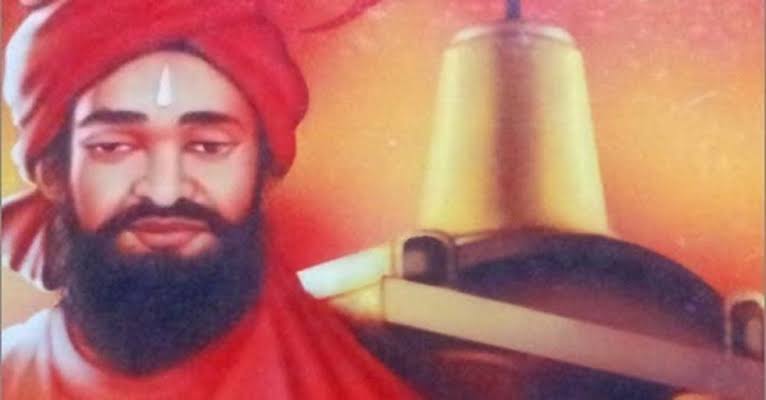
- 07 Mar 2024
Why is it in the News?
Tamil Nadu Governor R N Ravi’s recent remarks about the 19th-century social reformer Ayya Vaikundar — that he was Lord Vishnu incarnated to prevent the destruction of Sanatan Dharma — have evoked sharp reactions in the state, from politicians as well as Vaikundar’s followers.
Who was Ayya Vaikundar?
- Ayya Vaikundar, born in 1809, is revered as a social reformer and the founder of the Ayyavazhi sect, primarily in southern Tamil Nadu.
- His teachings focused on equality, fraternity, and the eradication of caste-based discrimination, challenging the established religious and social hierarchies of the time.
- At a time when rigid casteism and caste-based atrocities were the norm, Vaikundar introduced measures to challenge these divisions.
- He organized Samapanthi-bhojana or community eateries for people from all backgrounds.
- He would send his disciples to the homes of lower castes to eat with them.
- When lower castes were not allowed to fetch water from wells used by upper caste Hindus, Vaikundar initiated the digging of common wells, called Muthirikinarus.
- At a time when priests threw vibhuti and sandal paste at devotees from a distance to avoid touching them and lower castes were not allowed to enter temples at all, Vaikundar introduced Thottu Namam, in which he inspired priests to apply the sacred paste on devotees’ forehead, irrespective of their caste.
- The paste would be applied in the form of a lamp, indicating the soul and God, representing the form of God inside every life.
- Vaikundar also encouraged all devotees to wear turbans and dhotis, promoting equality.
- He initiated the Thuvayal Panthy programme, teaching vegetarianism and discipline to followers, who spread these teachings across Tamil Nadu.
- He established Nizhal Thangals as community worship spaces, which did not have any idol or deity, and only Tamil was used for worship.
- These community worship centers also had community kitchens and even basic schools.
- He pioneered education for the lower castes and opposed discriminatory taxes.
- One of his significant interventions was the introduction of simplified, inclusive marriage customs without a Brahmin priest or Sanskrit mantras.
Trees in Corbett fell prey to greedy nexus, says Supreme Court
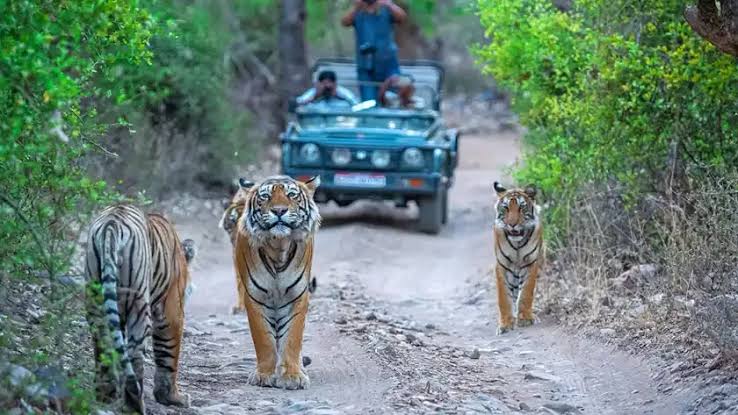
- 07 Mar 2024
Why is it in the News?
The Supreme Court on Wednesday condemned the illegal felling of over 6,000 trees to construct buildings, ostensibly for “eco-tourism” at the Jim Corbett National Park in Uttarakhand, as a “classic case” of nexus between politicians and officials working to ransack the environment for short-term commercial ends.
News Summary:
- In 2023, a series of applications brought attention to the creation of alleged illegal buildings and encroachment on water bodies, prompting court intervention.
- Petitioners highlighted violations of environmental norms and encroachment into core wildlife habitats.
- Evidence presented during proceedings revealed unauthorized constructions within the national park, including concrete and iron enclosures purportedly intended for a 'safari' experience.
- Moreover, it was disclosed that over 6,000 trees had been felled in the national park under the pretext of safari development.
Supreme Court’s Observations:
- The Court has raised concerns regarding the necessity of developing facilities within natural forest environments, particularly in areas designated for the protection of endangered species like tigers.
- Directing the Government to establish a committee, the Supreme Court seeks recommendations on whether tiger safaris should be permitted in buffer or fringe areas and what guidelines should govern their establishment if allowed.
- Additionally, the Court has strongly criticized the illegal constructions and extensive tree felling in Uttarakhand's Corbett National Park.
What are the Core and Buffer Areas in Tiger Reserves?
- As per the Wild Life (Protection) Amendment Act of 2006, a Tiger Reserve comprises core or critical habitat and a buffer zone surrounding it.
- Core areas hold the legal status of a National Park or a Sanctuary.
- Buffer zones consist of a mix of forest and non-forest land, managed as a multiple-use area.
- The buffer area acts as a protective barrier, absorbing the impact of poaching pressure on tiger and other wildlife populations.
About Jim Corbett National Park:
- Location: Situated in the Nainital district of Uttarakhand, Jim Corbett National Park is renowned for its rich biodiversity.
Key Facts:
- Established in 1935, it is India’s oldest national park.
- Initially named Hailey National Park after its founder Sir Malcolm Hailey, it was renamed Corbett National Park in 1956 to honor Jim Corbett's contributions to wildlife preservation in India.
- Corbett National Park boasts the highest population of tigers in India, highlighting its importance for tiger conservation efforts.
- Flora: Dominated by Sal, Semal, Kharpat, Sissoo, Khair, Dhak, Khingan, Bakli, Bel, Ber, Bamboo, Khingam, Jamun, Kanju, Rohini, and Pula trees.
- Sal, Khair, and Sissoo are prominently featured throughout the park.
- Fauna: Home to diverse wildlife including Tiger, Leopard, Elephant, Chital Deer, Sambar Deer, Hogg Deer, Barking Deer, Wild Boar, Langur, Wild pig, Rhesus Monkey, Jackal, Rabbit, Yellow Throated Martin, and Otters.
- Various reptiles such as Crocodile, Gharial, King Cobra, Common Krait, Cobra, Russell's Viper, Rock Python, and Monitor Lizard inhabit the park.
- The Kosi River feeds the eastern periphery of Corbett National Park.
- The Ramganga River (West) and its tributaries Sonanadi, Palain, and Mandal serve as significant hydrological resources for the park.
Vaishnaw bats for further simplification of economic laws at ‘NITI for States’ platform launch
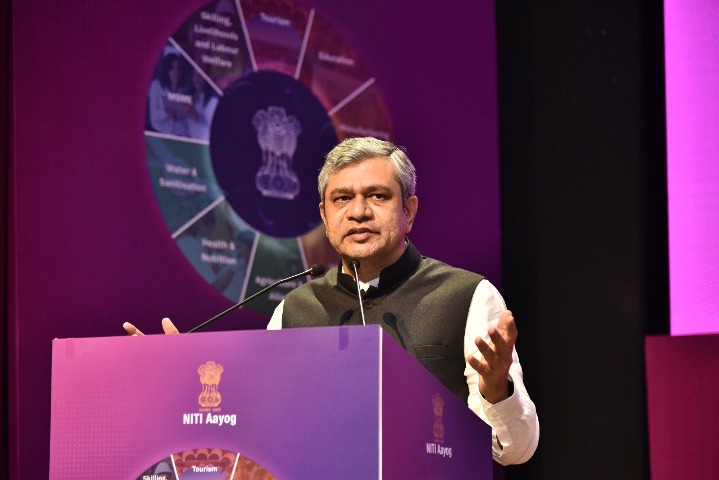
- 07 Mar 2024
Why is it in the News?
The Union IT, Communications, and Railways Minister Ashwini Vaishnaw Thursday stressed on the need to further simplify economic laws in a modern and relevant way at the launch of NITI Aayog’s ‘NITI for States’ platform.
About “NITI For States” Platform:
- It serves as a cross-sectoral knowledge hub envisioned to be a Digital Public Infrastructure (DPI) for Policy and Good Governance.
Key features include:
- A comprehensive repository comprising Best Practices, Policy documents, datasets, data profiles, and NITI publications across various sectors.
- Knowledge products spanning 10 sectors and two cross-cutting themes (Gender and Climate Change), such as Agriculture, Education, Energy, Health, Manufacturing, MSME, Tourism, Urban, and Water resources & WASH.
- An intuitive and user-friendly interface accessible via multiple devices, including mobile phones.
- The platform aims to catalyze digital governance transformation by providing government officials with contextualized, actionable knowledge and insights, thereby enhancing decision-making quality.
- It supports district collectors and block-level functionaries by granting access to innovative best practices from various States and Union Territories.
What is the Viksit Bharat Strategy Room?
- It serves as an interactive platform enabling users to visualize data, trends, best practices, and policies in an immersive manner, facilitating a comprehensive assessment of any problem statement.
- The platform features voice-enabled AI for user interaction and facilitates connectivity with multiple stakeholders through video conferencing.
- Designed as a plug-and-play model, it enables replication by states, districts, and blocks for widespread adoption.
- Collaboration with various government organizations by NITI Aayog includes:
- iGOT Karmayogi's "SAMARTH" online training modules accessible through the platform.
- Integration of NITI Aayog’s National Data and Analytics Platform (NDAP) to provide access to government datasets.
- Support from the National E-Governance Division (NeGD) in developing the innovative Viksit Bharat Strategy Room.
- Multi-lingual support provided by Bhashini.
- Integration of PM Gatishakti BISAG-N team, with DPIIT support, to offer geospatial tools for Area Based Planning.
INS Jatayu, India’s new naval base in Lakshadweep
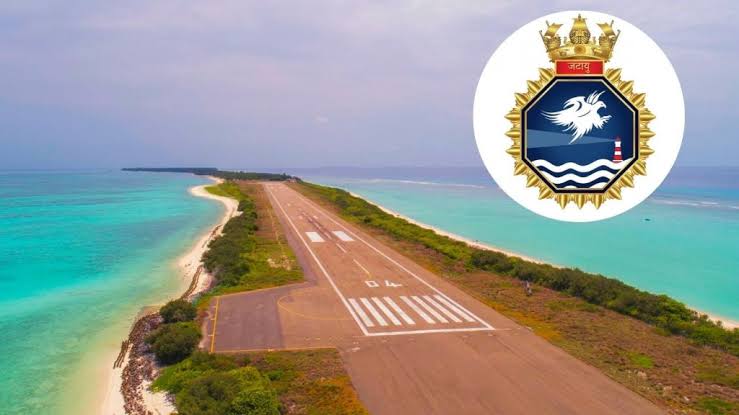
- 06 Mar 2024
Why is it in the News?
On Wednesday (March 6), Naval Detachment Minicoy will be commissioned as INS Jatayu, an upgraded naval base, marking an important milestone in the Indian Navy’s resolve to incrementally augment security infrastructure at the strategic Lakshadweep Islands.
About INS Jatayu Naval Base:
- The existing Naval Detachment Minicoy, which is under the operational command of the Naval Officer-in-Charge (Lakshadweep), will be commissioned as INS Jatayu.
- A naval detachment has administrative, logistics, and medical facilities.
- INS Jatayu will be upgraded to a naval base with additional infrastructure such as an airfield, housing, and personnel, after obtaining the requisite environmental and other clearances.
- The fragile ecology of the island may pose challenges for the construction but there are plans to construct a new airfield that will be capable of operating both military and civil aircraft.
Significance of INS Jatayu?
- The basing of an independent naval unit with requisite infrastructure and resources will enhance its overall operational capability in the islands.
- The establishment of the base is in line with the government’s focus on comprehensive development of the islands.
- The base will enhance its operational reach, facilitate its anti-piracy and anti-narcotics operations in the western Arabian Sea, and augment its capability as the first responder in the region.
- With the commissioning of INS Jatayu, the Indian Navy will add to its strength on the western seaboard.
- The proposed airfield will allow operations for a range of aircraft, including P8I maritime reconnaissance aircraft and fighter jets, and extend the Navy’s reach and operational surveillance capabilities at a time when India is seeking to counter the growing Chinese influence in the Indian Ocean Region.
- This has an immediate bearing at a time when India’s relations with the Maldives have come under strain since the election of the pro-China President Mohamed Muizzu.
About the Lakshadweep Islands:
- Lakshadweep, ‘a hundred thousand islands’ in Sanskrit and Malayalam, is an archipelago of 36 islands located between 220 km and 440 km from Kochi.
- The islands, only 11 of which are inhabited, have a total area of only 32 sq km.
- The Lakshadweep are part of a chain of coralline islands in the Indian Ocean that includes Maldives to the south, and the Chagos archipelago farther beyond, to the south of the equator.
- Given their location in the Indian Ocean, the Lakshadweep are of huge strategic importance to India.
- Minicoy straddles vital Sea Lines of Communications (SLOCs) — the world’s main maritime highways — including the Eight Degree Channel (between Minicoy and Maldives) and the Nine Degree Channel (between Minicoy and the main cluster of Lakshadweep islands).
- In consequence, the Lakshadweep Islands are also vulnerable to marine pollution.
Exclusive-World on brink of fourth mass coral reef bleaching event- NOAA
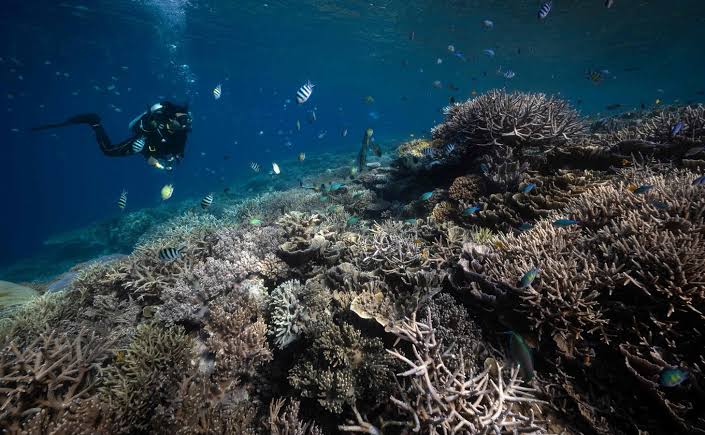
- 06 Mar 2024
Why is it in the News?
The world stands on the brink of witnessing its fourth mass coral bleaching event, a phenomenon that threatens to hit vast expanses of tropical reefs, including significant portions of Australia's iconic Great Barrier Reef.
Key Findings from the National Oceanic and Atmospheric Administration (NOAA):
- Impending Fourth Mass Coral Bleaching Event: The world is on the brink of a fourth mass coral bleaching event, following those in 1998, 2010, and 2014.
- To classify as global, widespread bleaching must occur across three ocean basins: the Atlantic, Pacific, and Indian.
- Impact of Previous Events: The last global mass coral bleaching event occurred from 2014 to 2017, resulting in the loss of nearly a third of the Great Barrier Reef's corals.
- Preliminary data indicates that approximately 15% of the world's reefs experienced significant coral die-offs during this event.
- Current Situation: This year is witnessing even more severe bleaching events, with the Caribbean experiencing its worst coral bleaching on record following the Northern Hemisphere summer last year.
- Link to Climate Phenomena: Coral bleaching is often associated with the naturally occurring El Niño climate phenomenon, which leads to warmer ocean waters.
- Climate Change Impact: The world recently experienced its first 12-month period with an average temperature exceeding 1.5 degrees Celsius (2.7 degrees Fahrenheit) above pre-industrial levels.
- A temperature rise of 1.5°C is considered the tipping point for mass coral die-offs, with scientists estimating that 90% of the world's corals could be lost as a result.
About the Corals and Coral Reefs:
- Corals: Corals are animals known as polyps, which engage in a symbiotic relationship with tiny algae called zooxanthellae.
- These algae provide corals with food and oxygen, while corals offer them a safe habitat.
- Coral Reefs: Coral reefs are limestone structures formed by thousands of tiny coral animals and are predominantly found in tropical climates.
Coral Bleaching and Its Concerns:
- Coral bleaching occurs when corals are exposed to stressful conditions like high temperatures, pollution, or changes in water chemistry, leading them to expel the zooxanthellae.
- Without these algae, corals lose their color and turn white, hence the term 'bleaching,' and cannot survive for long in this state.
- Recovery Potential: Despite its severity, coral bleaching doesn't necessarily mean the end of the reef; timely removal of stressors can facilitate the return of zooxanthellae and coral recovery.
- Ecological Importance: Coral reefs serve as habitats and food sources for numerous fish and marine species.
- They also offer coastal protection from erosion and storms and play a critical role in regulating the Earth's climate by absorbing and storing carbon dioxide.
- Cultural and Aesthetic Value: Beyond their ecological functions, coral reefs represent stunning biodiversity and natural beauty, making their loss a tragic prospect for future generations.
- Impacts: When coral reefs suffer, so do the ecosystems and communities reliant on them, underscoring the far-reaching consequences of coral degradation.
Google-backed satellite to track global oil industry methane emissions

- 06 Mar 2024
Why is it in the News?
MethaneSAT — a satellite which will track and measure methane emissions at a global scale — was launched aboard a SpaceX Falcon9 rocket from California recently.
What is MethaneSAT?
- MethaneSAT will orbit the Earth 15 times a day, monitoring the oil and gas sector.
- It will create a large amount of data, which will tell “how much methane is coming from where, who’s responsible, and are those emissions going up or down over time”.
- The data collected by MethaneSAT will be made public for free in near real-time.
- This will allow stakeholders and regulators to take action to reduce methane emissions.
Institutions involved in the development:
- The entity behind MethaneSAT is the Environmental Defense Fund (EDF) — a US-based nonprofit environmental advocacy group.
- To develop the satellite, EDF partnered with Harvard University, the Smithsonian Astrophysical Observatory, and the New Zealand Space Agency.
Features of MethaneSAT:
- Historically, tracking the source of methane emissions and measuring them has been quite challenging.
- ?While some satellites can provide high-resolution data, they can only scan specific, pre-targeted sites.
- Others can examine larger areas and detect large emitting events, but cannot scan “smaller sources that account for the majority of emissions in many, if not most, regions,” the EDF statement added.
- Due to this discrepancy, according to an International Energy Agency (IEA) report, global methane emissions are about 70 per cent higher than levels reported by national governments.
- MethaneSAT is expected to fix the issue.
- Equipped with a high-resolution infrared sensor and a spectrometer, the satellite will fill critical data gaps.
- It can track differences in methane concentrations as small as three parts per billion in the atmosphere, which enables it to pick up smaller emissions sources than the previous satellites.
- MethaneSAT also has a wide-camera view — of about 200 km by 200 km — allowing it to identify larger emitters so-called “super emitters”.
Significance of MethaneSAT:
- Advancing the Goals of the Global Methane Pledge 2021: The Global Methane Pledge, signed by over 150 countries in 2021, aims to reduce collective methane emissions by at least 30% from 2020 levels by 2030.
- During the previous year's COP, over 50 companies pledged to significantly reduce methane emissions and routine flaring.
- MethaneSAT will play a crucial role in helping these entities achieve their targets.
- Enhancing Transparency: The satellite will usher in a new era of transparency by providing publicly available data accessible to anyone worldwide.
- This data will enable monitoring of methane commitments made by governments and corporations, promoting accountability and transparency in emission reduction efforts."
Why Do We Need to Track and Measure Methane Emission?
- Methane is an invisible but strong greenhouse gas, and the second largest contributor to global warming after carbon dioxide, responsible for 30 percent of global heating since the Industrial Revolution.
- According to the United Nations Environment Programme, over a period of 20 years, methane is 80 times more potent at warming than carbon dioxide.
- The gas also contributes to the formation of ground-level ozone — a colorless and highly irritating gas that forms just above the Earth’s surface.
- According to a 2022 report, exposure to ground-level ozone could be contributing to one million premature deaths every year.
- Therefore, it is crucial to cut methane emissions and the main culprit, fossil fuel operations, which account for about 40 percent of all human-caused methane emissions.
- The objective of MethaneSAT is to help achieve this goal.
Holistic Progress Card: How NCERT is planning to change student assessment
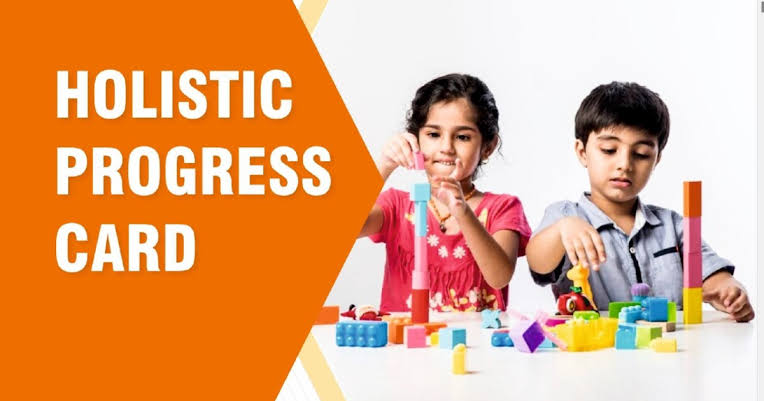
- 06 Mar 2024
Why is it in the News?
The New Education Policy (NEP), established in 2020, proposed redesigning the assessment system of school students in India recently.
About the Holistic Progress Card (HPC):
- It Is Developed by Performance Assessment, Review, and Analysis of Knowledge for Holistic Development (PARAKH), a standard-setting body under the NCERT.
- The Holistic Progress Card (HPC) marks a significant departure from traditional assessment methods for students in the foundational stage (Classes 1 and 2), preparatory stage (Classes 3 to 5), and middle stage (Classes 6 to 8), aligning with the recommendations of the National Education Policy (NEP) 2020.
Key Features:
- Incorporates feedback from parents, classmates, and self-evaluation by students.
- Aims to provide a comprehensive view of students' academic performance, cognitive abilities, socio-emotional skills, and creativity during class activities.
- Aligns with the National Curriculum Framework for School Education (NCFSE) to prioritize learner-centric evaluation.
- Emphasizes a shift from numerical grades to a 360-degree evaluation, focusing on students' active engagement in class activities and the demonstration of diverse skills and competencies.
- Enables teachers to identify students' strengths and weaknesses, fostering personalized support and intervention.
- Encourages students to reflect on their progress and set academic and personal goals, fostering self-awareness and accountability.
- Involves parents in the learning process, integrating their insights on homework, classroom engagement, and extracurricular activities.
- Includes peer evaluation, allowing students to assess their classmates' contributions to activities.
Benefits:
- Goes beyond numerical grades, providing descriptive and analytical evaluations that encompass academic achievements and critical skill development.
- Promotes a shift from summative to formative assessment, fostering competency-based evaluation and holistic growth.
Majuli Island's Mask Craft Celebrated With Geographical Indication Tag
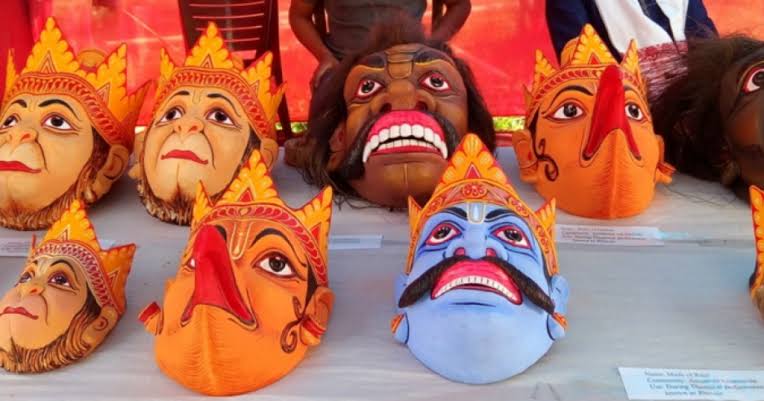
- 06 Mar 2024
Why is it in the News?
Adding to their growing national and international recognition, the traditional Majuli masks in Assam were given a Geographical Indication (GI) tag by the Centre recently.
What are Majuli Masks?
- These handmade masks are traditionally used to depict characters in bhaonas, or theatrical performances with devotional messages under the neo-Vaishnavite tradition.
- Majuli, the largest river island in the world and the seat of Assam’s neo-Vaishnavite tradition, has been home to the art of mask-making since the 16th century.
- It was introduced by the 15th-16th century reformer saint Srimanta Sankardeva.
- The masks can depict gods, goddesses, demons, animals and birds — Ravana, Garuda, Narasimha, Hanuman, Varaha Surpanakha all feature among the masks.
- They can range in size from those covering just the face (mukh mukha), which take around five days to make, to those covering the whole head and body of the performer (cho mukha), which can take up to one-and-a-half months to make.
- According to the application made for the patent, the masks are made of bamboo, clay, dung, cloth, cotton, wood and other materials available in the riverine surroundings of their makers.
Why is This Art Practiced in Monasteries?
- Sattras are monastic institutions established by Srimanta Sankardev and his disciples as centers of religious, social and cultural reform.
- Today, they are also centers of traditional performing arts such as borgeet (songs), sattriya (dance) and bhaona (theater), which are an integral part of the Sankardev tradition.
- Majuli has 22 sattras, and the patent application states that the mask-making tradition is by and large concentrated in four of them:
- Samaguri Sattra
- Natun Samaguri Sattra
- Bihimpur Sattra and
- Alengi Narasimha Sattra
What is Majuli Manuscript Painting?
- It is a form of painting which also received the GI tag.
- It originated in the 16th century done on sanchi pat, or manuscripts made of the bark of the sanchi or agar tree, using homemade ink.
- The earliest example of an illustrated manuscript is said to be a rendering of the Adya Dasama of the Bhagwat Purana in Assamese by Srimanta Sankardev.
- This art was patronized by the Ahom kings.
- It continues to be practiced in every sattra in Majuli.
India ranks 113 out of 190 countries in the World Bank’s legal gender gap index
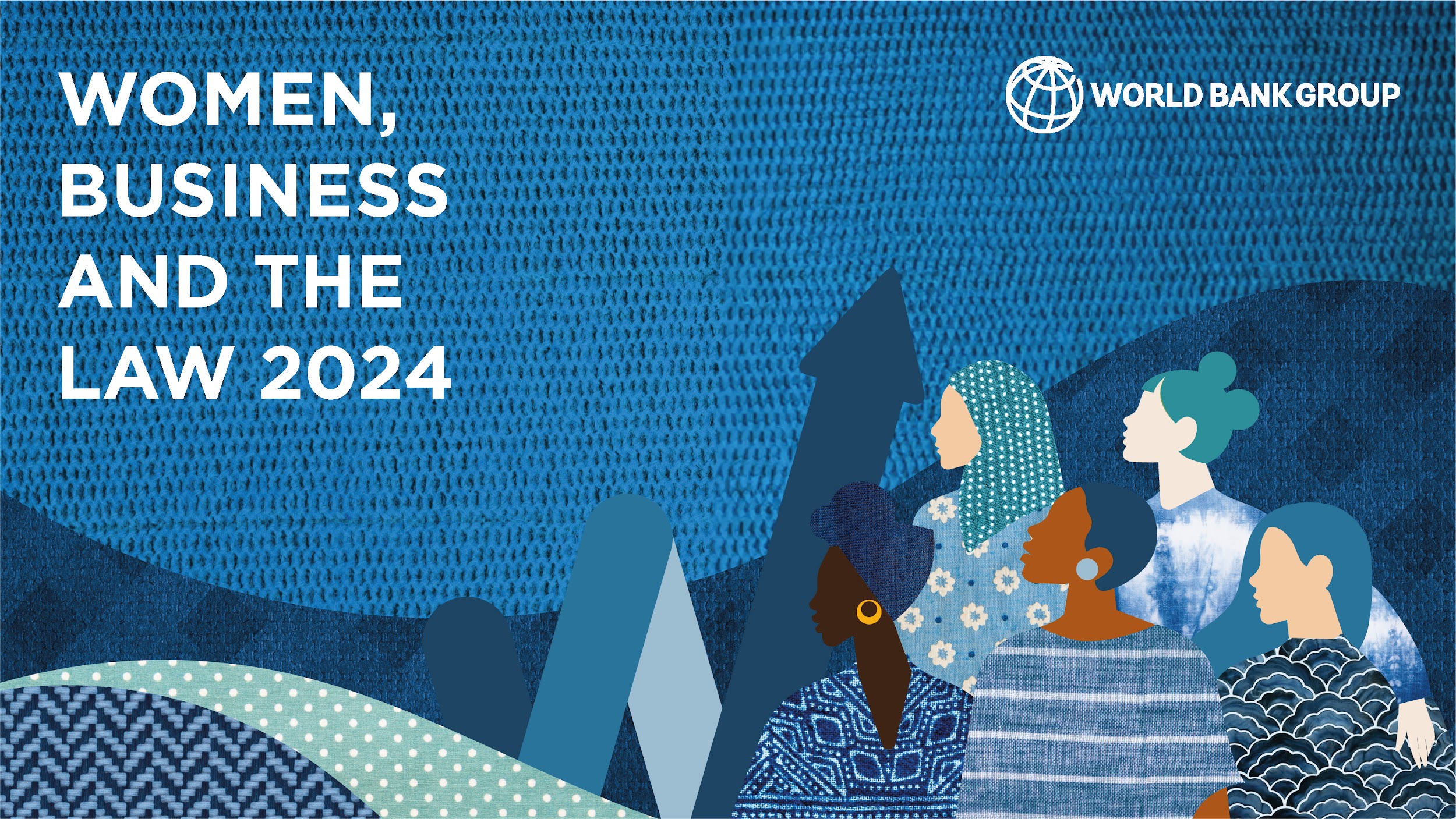
- 05 Mar 2024
Why is it in the News?
India's ranked improved to 113 out of 190 countries in the World Bank’s Women, Business and Law index, according to the 10th edition of the report released Monday.
About Women, Business and Law Index:
- The "Women, Business and the Law (WBL)" index is a project of the World Bank Group, specifically designed to measure the legal environment for women's economic opportunities across 190 economies.
- It's distinct from a general "Gender Equality Index" as it focuses specifically on legal frameworks and their impact on women's involvement in business and professional life.
What does it Measure?
- The WBL index assesses legal frameworks across eight indicators:
- Mobility (freedom of movement)
- Workplace (discrimination, maternity leave, etc.)
- Pay (equal pay for equal work)
- Marriage (property rights, domestic violence)
- Parenthood (parental leave, child custody)
- Entrepreneurship (starting and running a business)
- Assets (ownership and inheritance)
- Pension (access to and benefits)
- Scoring: Each indicator is scored on a scale of 0 to 100, with 100 representing the highest level of legal rights and protections for women.
- The overall score for a country is the average of these eight indicators.
- Latest version: The latest edition is "Women, Business and the Law 2024", released in October 2023.
- This version also introduces two new indicators:
- Safety (addressing violence against women)
- Childcare (availability, affordability, and quality)
Highlights of the Report:
- Women spend an average of 2.4 more hours a day on unpaid care work than men—much of it on the care of children.
- Only 62 economies—fewer than a third—have quality standards governing childcare services, which has an adverse impact on the employment opportunity of women as mothers with young children have their battles to pick.
- Women face hindrances in areas such as entrepreneurship as just one in every five economies mandate gender-sensitive criteria for public procurement processes, meaning women are deprived of significant economic opportunities.
About India:
- According to the 10th edition of the Women, Business and Law index, India ranks 113 out of 190 countries in the Index.
- The addition of Safety and childcare as indicators in the new index is believed to have improved India’s ranking slightly.
- The index shows that in India, women enjoy 60% of the legal rights compared to men, which is lower than the global average of 64.2%, but much higher than the 45.9% of the legal protections compared to men.
- Over the years, India’s score has remained constant at 74.4%, whereas a total of 14 countries around the world, including Denmark, Canada, and Finland, score a perfect 100 in the legal framework score.
- Some of the less developed countries like Ethiopia, Namibia, and even Burundi have better scores than India.
- India’s performance is much lower in providing supportive frameworks, such as programs, services, budgets, procedures, inspections, and sanctions for non-compliance with quality standards.
- Only 54.2% of the supportive frameworks needed were established in the country.
Venice Biennale, ‘the Olympics of the art world’, set to open on April 20

- 05 Mar 2024
Why is it in the News?
The 60th edition of the Venice Biennale, known as “the Olympics of the art world”, will open on April 20.
What is the Venice Biennale?
- The Venice Biennale is one of the biggest and most prestigious art fairs in the world.
- Biennale is an Italian word which means ‘every other year’. Over the years, however, it has come to mean a large international exhibition that takes place every two years.
- A biennale exhibition is different from a regular exhibition as it is organized on a large scale and involves multiple venues.
- Biennales feature contemporary art by artists from various countries that are usually linked by a common curatorial theme, providing a framework for exploring contemporary social, economic and political ideas in an international context.
India’s participation:
- India made its debut at the Biennale in 1954. Recording robust sales, the exhibition comprised over 50 paintings of masters such as M F Husain, S H Raza, Jamini Roy, Amrita Sher-Gil, and Francis Newton Souza.
- After 1954, the country officially participated in the event in 2011. The exhibition was organized by Lalit Kala Akademi and curated by Ranjit Hoskote.
- It featured works by artists like Zarina Hashmi, Gigi Scaria, Praneet Soi, and the Desire Machine Collective.
- At the 2019 Venice Biennale, the Ministry of Culture, Confederation of Indian Industry, National Gallery of Modern Art, and Kiran Nadar Museum of Art (KNMA) in collaboration organized the Indian pavilion.
Will India have a presence at the 2024 Venice Biennale?
- This year, the Biennale is helmed by its first Latin American curator — the artistic director of the São Paulo Museum of Art, Adriano Pedrosa.
- His theme for the event is “Foreigners Everywhere”, which will delve into the experiences of those living on the margins, as outsiders, immigrants or indigenous populations.
- Works by Indian artists will also feature in this central exhibition.
- This includes the late modernists Ram Kumar, B Prabha, SH Raza, Jamini Roy, Amrita Sher-Gil, FN Souza, and Goa-based Monika Correa.
- Representing the contemporary will be the public art collective Aravani Art Project, led by trans and cis women.
India halts Pakistan-bound ship suspected of carrying CNC machines from China

- 05 Mar 2024
Why is it in the News?
Recently, Prime Minister Narendra Modi witnessed the start of the process of core-loading the indigenous prototype fast breeder reactor (PFBR) at the Madras Atomic Power Station in Kalpakkam, Tamil Nadu.
What is the PFBR?
- The PFBR, or Prototype Fast Breeder Reactor, is a nuclear reactor designed to produce more nuclear fuel than it consumes.
- In nuclear fission, the nucleus of an atom absorbs a neutron, becomes unstable, and splits into two, releasing energy.
- If the unstable nucleus releases additional neutrons, the reactor’s facilities can utilize them to initiate more fission reactions.
How does the PFBR work?
- PHWRs use natural or low-enriched U-238 as the fissile material and produce Pu-239 as a byproduct.
- This Pu-239 is combined with more U-238 into a mixed oxide and loaded into the core of a new reactor together with a blanket.
- This is a material the fission products in the core react with to produce more Pu-239.
- A breeder reactor is a nuclear reactor that produces more fissile material than it consumes.
- In a ‘fast’ breeder reactor, the neutrons aren’t slowed, allowing them to trigger specific fission reactions.
- The PFBR is designed to produce more Pu-239 than it consumes.
- It uses liquid sodium, a highly reactive substance, as coolant in two circuits. Coolant in the first circuit enters the reactor and leaves with (heat) energy and radioactivity.
- Via heat-exchangers, it transfers only the heat to the coolant in a secondary circuit.
- The latter transfers the heat to generators to produce electricity.
DoT launches Digital Intelligence Portal, ‘Chakshu’ facility to curb cyber crimes, financial frauds
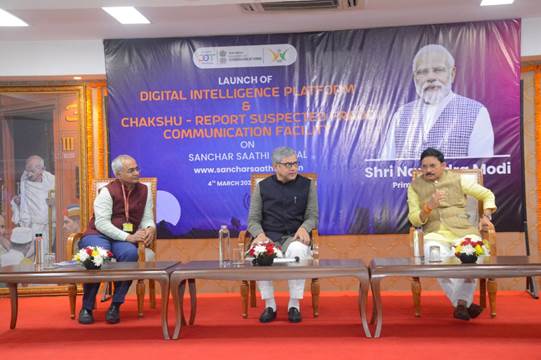
- 05 Mar 2024
Why is it in the News?
The Department of Telecommunications (DoT) recently launched its ‘Digital Intelligence Platform (DIP)’ to curb the misuse of telecom resources in cybercrimes and financial frauds, and the ‘Chakshu’ facility on the Sanchar Saathi portal to enable citizens to report suspected fraud communication.
About Digital Intelligence Platform (DIP):
- Digital Intelligence Platform (DIP) is developed by the Department of Telecommunications.
- It is a secure and integrated platform for real time intelligence sharing, information exchange and coordination among the stakeholders i.e. Telecom Service Providers (TSPs), law enforcement agencies (LEAs), banks and financial institutions (FIs), social media platforms, identity document issuing authorities etc.
- The portal also contains information regarding the cases detected as misuse of telecom resources. The shared information could be useful to the stakeholders in their respective domains.
- It also works as a backend repository for the citizen-initiated requests on the Sanchar Saathi portal for action by the stakeholders.
- The DIP is accessible to the stakeholders over secure connectivity and the relevant information is shared based on their respective roles.
- The said platform is not accessible to citizens.
What is the Chakshu Facility?
- Chakshu is the latest addition to the citizen centric facilities already available on the Sanchar Saathi portal of DoT.
- It facilitates citizens to report suspected fraud communication received over call, SMS or WhatsApp with the intention of defrauding like KYC expiry or update of bank account / payment wallet / SIM / gas connection / electricity connection, sextortion, impersonation as government official / relative for sending money, disconnection of all mobile numbers by Department of Telecommunications etc.
- In case, a citizen is already a victim of cyber-crime or financial fraud, it is advised to report at cyber-crime helpline number 1930 or website https://www.cybercrime.gov.in of Government of India.
Carbon Capture and How it Can Help Save the Planet

- 05 Mar 2024
Why is it in the News?
Germany has recently declared its approval for carbon capture and offshore storage for specific industrial sectors.
What is Carbon Capture and Storage?
- CCS refers to a host of different technologies that capture CO2 emissions from large point sources like refineries or power plants and trap them beneath the Earth.
- Notably, CCS is different from carbon dioxide removal (CDR), where CO2 is removed from the atmosphere.
- CCS involves three different techniques of capturing carbon, including: Post-combustion, Pre-combustion, and Oxyfuel combustion.
- In post-combustion, CO2 is removed after the fossil fuel has been burnt. By using a chemical solvent, CO2 is separated from the exhaust or ‘flue’ gasses and then captured.
- Pre-combustion involves removing CO2 before burning the fossil fuel. “First, the fossil fuel is partially burned in a ‘gasifier’ to form synthetic gas. CO2 can be captured from this relatively pure exhaust stream,” according to a report by the British Geological Survey. The method also generates hydrogen, which is separated and can be used as fuel.
- In oxyfuel combustion, the fossil fuel is burnt with almost pure oxygen, which produces CO2 and water vapor. The water is condensed through cooling and CO2 is separated and captured. Out of the three methods, oxyfuel combustion is the most efficient but the oxygen burning process needs a lot of energy.
- Post-combustion and oxyfuel combustion equipment can be retro-fitted in existing plants that were originally built without them. Pre-combustion equipment, however, needs “larger modifications to the operation of the facility and are therefore more suitable to new plants.
- After capture, CO2 is compressed into a liquid state and transported to suitable storage sites.
- Although CO2 can be transported through ship, rail, or road tanker, pipeline is the cheapest and most reliable method.
Can Carbon Capture Help Save the world?
- Operational CCS projects generally claim to be 90 percent efficient, meaning they can capture 90 per cent of carbon and store it.
- Studies, however, have shown that a number of these projects are not as efficient as they claim to be.
- For example, a 2022 study by the Institute for Energy Economics and Financial Analysis (IEEFA) found most of the 13 flagship CCS projects worldwide that it analyzed have either underperformed or failed entirely.
- Moreover, CCS technologies are quite expensive.
- When CCS is attached to coal and gas power stations it is likely to be at least six times more expensive than electricity generated from wind power backed by battery storage.
- It is far cheaper and more efficient to avoid CO2 emissions in the first place.
- There are also only a few operational CCS projects across the world even though the technology has been pushed for decades.
- According to the International Energy Agency (IEA), there were 40 operational CCS projects in 2023, which captured more than 45 metric tonnes (Mt) of CO2 annually.
- To ensure the planet doesn’t breach the 1.5 degree Celsius temperature increase limit, it would take an “inconceivable” amount of carbon capture “if oil and natural gas consumption were to evolve as projected under today’s policy settings.
- It added that the electricity required to capture that level of carbon as of 2050 would be more than the entire planet’s use of electricity in 2022.
- Therefore, there couldn’t be an overreliance on carbon capture as a solution to tackle climate change.
Grey-zone Warfare Latest Entry in Lexicon of Warfare

- 04 Mar 2024
Why is it in the News?
On the last day of the 2024 Raisina Dialogue (February 24), India’s Chief of Defence Staff General Anil Chauhan said that “grey zone warfare” is the latest in informal warfare.
What is the Grey Zone Warfare?
- Grey zone warfare refers to a strategic approach where a nation seeks to gain advantages over others without engaging in overt conflict.
- It involves a series of tactics, including cyberattacks, disinformation campaigns, and economic pressures, aimed at subtly undermining or destabilizing adversaries.
- China has notably employed this strategy against India and neighboring countries.
What are the China's Grey Zone Tactics Against India?
- South China Sea Activities: China asserts its dominance in the South China Sea using naval and civilian vessels, raising tensions with neighboring countries like India.
- Infrastructure Near Borders: China constructs infrastructure and settlements near India's borders, bolstering territorial claims and strategic positioning.
- Digital Investments: China invests in Indian digital platforms and media, influencing public narratives and perceptions.
India's Counter-Measures:
- Inter-Agency Collaboration: India promotes collaboration among defense, intelligence, and law enforcement agencies to devise comprehensive strategies to counter grey zone threats.
- Enhanced Vigilance: India increases surveillance and presence in border areas and strategic locations to detect and respond to covert Chinese activities.
- Regulating Foreign Investments: India scrutinizes foreign investments in critical sectors, particularly technology, to safeguard national security interests.
Long-Term Implications for India:
- Information Warfare: Grey zone conflicts often involve digital misinformation, influencing public opinion and perceptions.
- Economic Leverage: Dependency on foreign investments poses vulnerabilities if used as leverage by investing nations.
- Technology Dependency: Heavy reliance on foreign technology exposes India to risks, emphasizing the need to bolster indigenous technological capabilities.
Conclusion
Grey zone warfare encompasses a multifaceted strategic landscape, blending digital, economic, and geopolitical tactics. India recognizes these challenges and is actively devising strategies to navigate this complex terrain.
PM Modi hails those supporting wildlife conservation efforts on World Wildlife Day
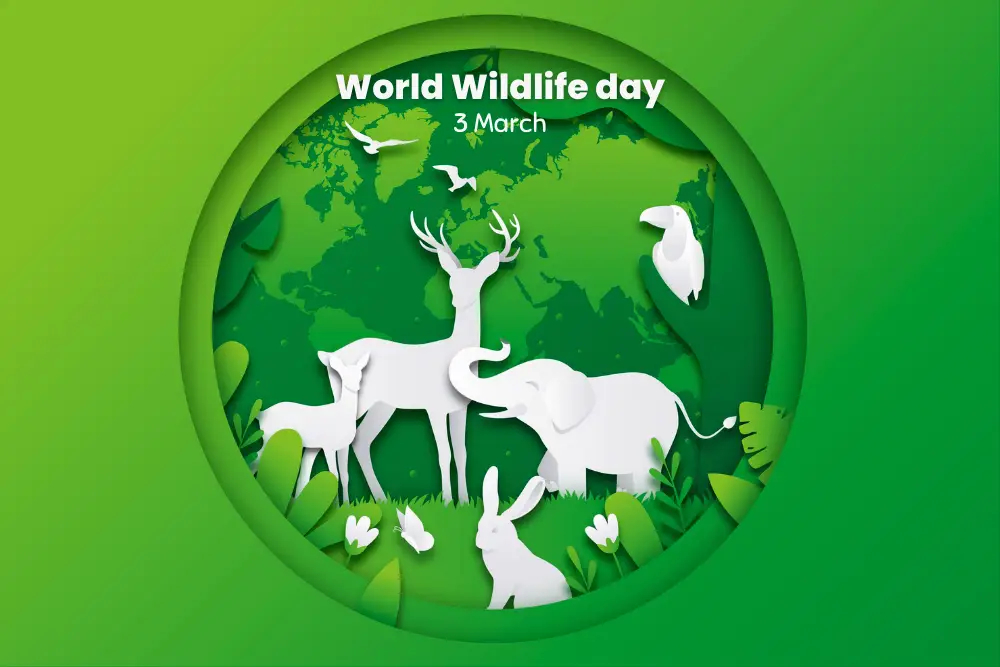
- 04 Mar 2024
Why is it in the News?
On the occasion of World Wildlife Day on March 3, Prime Minister Narendra Modi lauded those at the forefront of sustainable practices and supporting wildlife conservation efforts.
About the World Wildlife Day:
- World Wildlife Day is observed to advocate for sustainable practices that contribute to biodiversity conservation and to enhance public consciousness about the importance of safeguarding and nurturing animals.
- It endeavors to underscore the interconnectedness of all life forms on Earth and to foster harmonious coexistence between humans and animals through activism, advocacy, and education.
Origins:
- Initially proposed by Thailand to the UN General Assembly in 2013, World Wildlife Day aimed to dedicate a day to spotlight the significance of wild animals and plants worldwide.
- On December 20, 2013, the General Assembly adopted a resolution, designating March 3 as World Wildlife Day from 2014 onwards.
- Coinciding with the day, the Convention on International Trade in Endangered Species of Wild Fauna and Flora (CITES) was signed in 1973, emphasizing the importance of safeguarding species from the threats of international trade.
The theme of WWD 2024:
- The theme, "Connecting People and Planet: Exploring Digital Innovation in Wildlife Conservation," underscores the potential of technological advancements to revolutionize conservation efforts.
- In today's digital era, technological breakthroughs offer novel solutions to persistent conservation challenges, making this theme particularly relevant.
Significance:
- World Wildlife Day serves as a vital global awareness platform for animal protection and conservation.
- It reinforces the intrinsic value of animals and advocates for treating them with compassion, integrity, and reverence.
About the Convention on International Trade in Endangered Species of Wild Fauna and Flora (CITES):
- CITES is an international treaty that aims to regulate and monitor the trade of endangered plants and animals, including their parts and derivatives, to ensure their survival in the wild.
- Under CITES, member countries are required to regulate and monitor the trade of endangered species through a system of permits and quotas.
- They must also report regularly on their implementation of the treaty and collaborate with other countries to ensure its effectiveness.
- Currently, CITES has 184 parties.
Supreme Court’s ban on Patanjali ads

- 04 Mar 2024
Why is it in the News?
Recently, the Supreme Court restrained Patanjali Ayurved from discrediting allopathy in its campaigns, and from advertising products that claim to cure chronic conditions.
What is the Magic Remedies Act?
- The Drugs and Magic Remedies (Objectionable Advertisements) Act of 1954 is a legislative framework to control the advertisement of drugs and prohibit claims of magical qualities in remedies.
- The Act encompasses various forms of advertisements, including written, oral, and visual mediums.
What does the Magic Remedies Act entail?
- Under the Act, “drug” refers to medicines intended for human or animal use, substances for diagnosis or treatment of diseases, and articles affecting the body’s functions.
- Other than articles meant for consumption, the definition of “magic remedy” under this Act also extends to talismans, mantras, and charms that allegedly possess miraculous healing powers or influence bodily functions.
Regulations on advertisements under the Magic Remedies Act:
- The Act imposes strict regulations on the publication of advertisements related to drugs.
- It prohibits advertisements that give false impressions, make false claims, or are otherwise misleading.
- The term “advertisement,” under the Act, extends to all notices, labels, wrappers, and oral announcements.
- Violations of these provisions can result in penalties upon conviction, including imprisonment or fines.
Punishment:
- Violating the Act can result in imprisonment, fines, or both.
- If this is the first conviction for the violator, they may face up to six months in prison, fines, or both.
- For a subsequent conviction, imprisonment may extend to one year, a fine, or both.
- The Act does not include any limits for the fines that may be imposed on individuals or organizations.
Who comes under the Magic Remedies Act?
- The Act applies to all individuals and entities involved in the publication of advertisements, including manufacturers, distributors, and advertisers.
- The Act can hold both individuals and companies accountable for contraventions.
Several OPEC+ nations extend oil cuts to boost prices

- 04 Mar 2024
Why is it in the News?
Moscow, Riyadh, and several other OPEC+ members announced extensions to oil production cuts first announced in 2023 as part of an agreement among oil producers to boost prices following economic uncertainty.
What is the OPEC+ Oil Alliance?
- OPEC+ is a coalition of oil-exporting nations that convenes regularly to determine the quantity of crude oil to offer on the global market.
- Origin: This alliance was established in late 2016 to formalize a framework for collaboration between OPEC and non-OPEC oil-producing nations on a consistent and sustainable basis.
- The primary objective of these nations is to collaborate on regulating crude oil production to stabilize the oil market.
- OPEC+ collectively controls approximately 40% of global oil supplies and holds over 80% of proven oil reserves.
- At its core, OPEC+ consists of OPEC member states, predominantly comprising nations from the Middle East and Africa.
- Membership: It includes OPEC member states along with Azerbaijan, Bahrain, Brunei, Kazakhstan, Russia, Mexico, Malaysia, South Sudan, Sudan, and Oman.
About the Organization of the Petroleum Exporting Countries (OPEC):
- OPEC, short for the Organization of the Petroleum Exporting Countries, is a permanent intergovernmental organization comprised of oil-exporting nations.
Mission:
- To coordinate and harmonize the petroleum policies of its member countries.
- To ensure the stability of oil prices in global oil markets, aiming to eliminate detrimental and unnecessary fluctuations.
- Formation: Founded in 1960 by the five original members - Iran, Iraq, Kuwait, Saudi Arabia, and Venezuela.
- Presently, it consists of 13 member countries, which include Algeria, Angola, Congo, Equatorial Guinea, Gabon, Libya, Nigeria, and the United Arab Emirates.
- Headquarters: Located in Vienna, Austria.
India halts Pakistan-bound ship suspected of carrying CNC machines from China
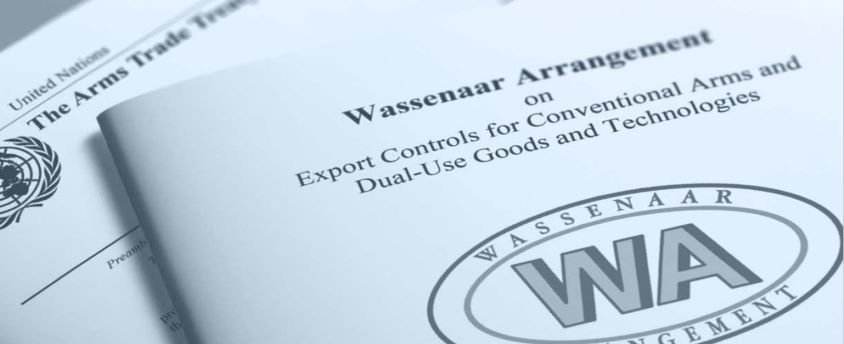
- 04 Mar 2024
Why is it in the News?
Recently, Indian security agencies have intercepted a Pakistan-bound ship from China at Mumbai's Nhava Sheva port.
What are CNC Machines and Wassenaar Arrangements?
- CNC machines are controlled by a computer and offer efficiency, consistency, and accuracy not possible manually.
- These machines have been included in the Wassenaar Arrangement since 1996.
- This international arms control regime aims to stop the proliferation of equipment with both civilian and military uses, with India being among the 42 member countries exchanging information on transfers of conventional weapons and dual-use goods and technologies.
About the Wassenaar Arrangement:
- The Wassenaar Arrangement is a voluntary export control framework established in July 1996.
- Comprising 42 member nations, it facilitates the exchange of information regarding transfers of conventional weaponry and dual-use goods and technologies.
- Dual-use items possess the capacity for both civilian and military applications.
- The arrangement's secretariat is headquartered in Vienna, Austria.
Membership:
- The arrangement boasts 42 member states, predominantly consisting of NATO and EU nations.
- Members are obligated to report arms transfers and dual-use goods and technology transfers or denials to destinations beyond the arrangement biannually.
- India became a member of the Arrangement in 2017.
Objectives:
- Central to its operation is the continual exchange of technology-related information, encompassing both conventional and nuclear-capable technologies, among member states.
- This information exchange involves the maintenance and refinement of comprehensive lists of materials, technologies, processes, and products deemed militarily significant.
- The primary goal is to regulate the movement of technology, materials, or components to entities or nations that could jeopardize global security and stability.
Wassenaar Arrangement Plenary:
- The WA Plenary is the decision-making and governing body of the Arrangement.
- It is composed of representatives of all Participating States who normally meet once a year, usually in December.
- Chairmanship of the Plenary is subject to annual rotation among Participating States.
- In 2018, the United Kingdom held the Plenary Chair, while Greece assumed the position in 2019.
- Decisions within the Plenary are made through consensus.
Bengaluru's Rameshwaram cafe blast puts the spotlight on IEDs
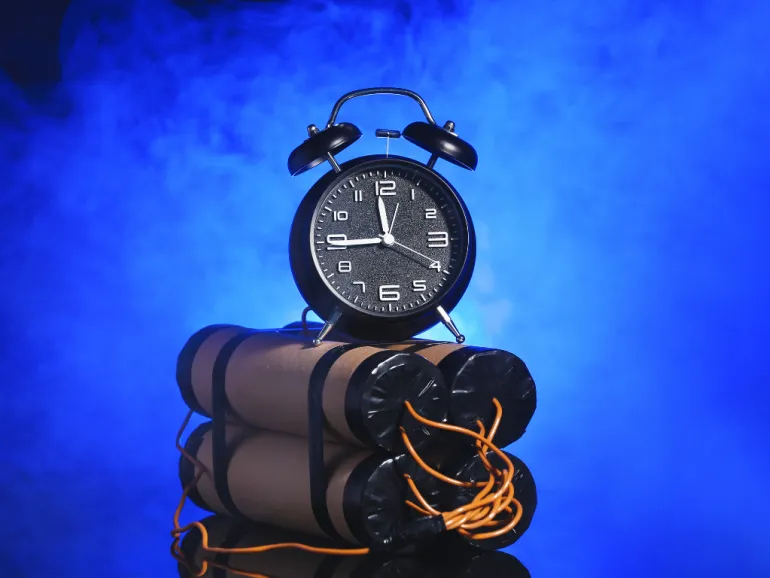
- 02 Mar 2024
Why is it in the News?
At least nine people were injured after an explosion at the bustling Rameshwaram Cafe in Bengaluru’s Whitefield area recently, possibly by an improvised explosive device (IED).
What is Improvised Explosive Devices (IEDs)?
- An Improvised Explosive Device (IED) refers to a makeshift explosive device constructed and deployed unorthodoxly or improvised.
- These devices are typically crafted using commonly available materials, including explosives, triggers, and containers, often to cause destruction, injury, or death.
- IEDs can vary widely in design and complexity, ranging from simple pipe bombs to more intricate devices incorporating timers, remote controls, or even cellular communication for activation.
- IEDs can be deployed using a vehicle, carried, placed, or thrown by a person, delivered in a package, or concealed on the roadside.
- Due to their adaptable nature, IEDs are commonly used by insurgents, terrorists, and other malicious actors to carry out attacks against both military and civilian targets.
- Their unpredictable nature and often concealed placement make them particularly challenging for security forces to detect and mitigate.
- Efforts to counter IED threats involve a combination of technological advancements, intelligence gathering, and counterinsurgency strategies aimed at identifying and neutralizing these devices before they can cause harm.
Types of IEDs:
- Vehicle-Borne IEDs: Among the most destructive forms of IEDs are those concealed within vehicles. These can be driven to specific locations and detonated, causing massive explosions capable of levelling buildings.
- Suicide Bombings: Suicide bombings involve individuals strapping IEDs to their bodies, becoming human carriers of destruction. This method inflicts maximum damage in densely populated areas.
- Package IEDs: Package IEDs are small devices hidden in innocuous-looking packages. They are often placed in public spaces, targeting unsuspecting victims.
Methods of IED Initiation:
- Remote Control: IEDs can be remotely triggered using various methods, such as cell phones or radio signals, allowing attackers to maintain a safe distance from the explosion.
- Pressure Activation: Pressure-sensitive IEDs detonate when a certain amount of pressure is applied, making them lethal traps for those who inadvertently trigger them.
- Timers: IEDs can also be equipped with timers, which delay the explosion to occur at a specific time, further complicating detection and prevention.
The Devastating Impact of IEDs:
- The aftermath of IED explosions is often catastrophic, leading to loss of life, severe injuries, and widespread damage to infrastructure.
- The psychological impact on survivors and affected communities can be long-lasting.
Detection Technologies and Challenges:
- Detection technologies such as (Metal Detectors, X-ray and Imaging Scanners, Explosive Trace Detection (ETD), and Sniffer Dogs) play a critical role in countering the threat of Improvised Explosive Devices (IEDs), but they also face numerous challenges due to the evolving nature of these devices.
India to Make Climate Risk Disclosures Mandatory for Banks
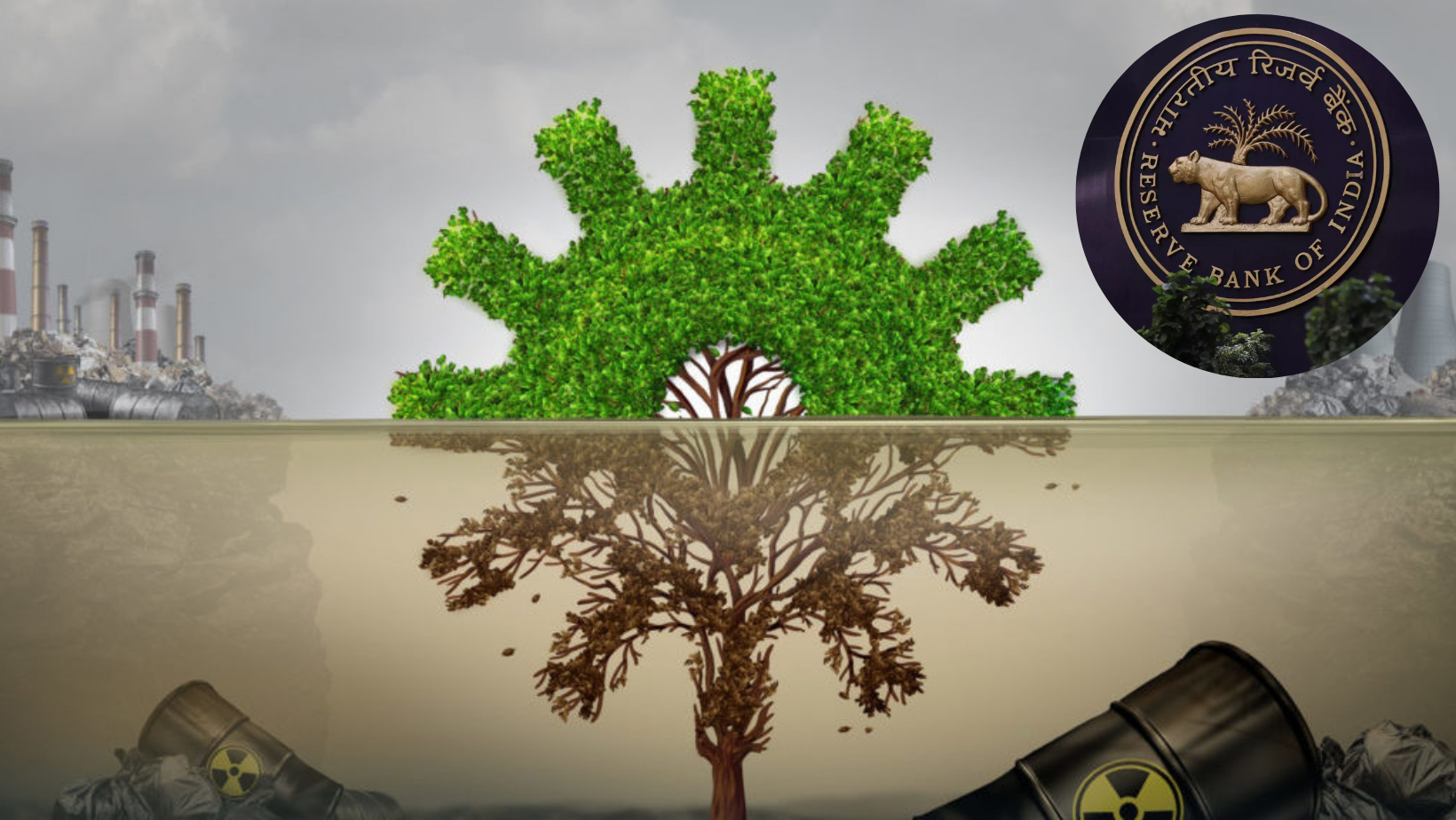
- 02 Mar 2024
Why is it in the News?
While acknowledging the importance of the environment and its long-term impact on organizations and the economy as a whole, the Reserve Bank of India (RBI) has now released a draft framework for banks to follow.
What are Climate-led Financial Risks?
- “Climate-related financial risks” means the potential risks that may arise from climate change or from efforts to mitigate climate change, their related impacts, and economic and financial consequences according to RBI.
- These risks manifest through two primary channels: physical risks and transition risks.
- Physical Risks: These entail the economic and financial consequences arising from the escalating frequency and severity of extreme weather events linked to climate change. Such events can exert pressure on the financial sector in various ways:
- Renewable Energy Sector (REs) Vulnerability: The occurrence of local or regional weather events may strain the anticipated cash flows to REs, impacting their financial stability. Furthermore, chronic flooding or landslides pose risks to the collateral that REs have pledged as security for loans.
- Infrastructure and Property Damage: Severe weather phenomena can inflict damage on the physical assets and data centres owned or leased by REs, impairing their capacity to deliver financial services effectively.
- Transition Risks: These risks stem from the transition toward a low-carbon economy, influenced by factors such as evolving climate-related policies, technological advancements, and changing consumer behaviours. Key considerations include:
- Policy and Regulatory Shifts: Changes in climate-related regulations and policies, along with advancements in technologies, can significantly influence the transition process. Moreover, alterations in customer sentiments and behaviour patterns play a pivotal role in shaping this transition.
- Economic Impact: The transition toward reducing carbon emissions carries substantial implications for the economy at large. It entails a shift toward sustainable practices and investments, which can impact various sectors and industries differently.
- Recognizing and addressing these climate-related financial risks is imperative for ensuring the resilience and stability of the financial sector in the face of evolving environmental challenges.
About the Framework:
- Commencing from the financial year 2025-26, all major financial institutions across India, including top-tier NBFCs and renowned NBFCs, will be mandated to furnish details about governance, strategy, and risk management strategies.
- Additionally, they will be required to initiate disclosure of metrics and targets from the fiscal year 2027-28.
Key highlights of the framework include:
- Enhanced Disclosure Requirements: Banks will be obligated to unveil climate-related risks that could potentially impact their financial stability.
- This measure aims to facilitate a comprehensive understanding of climate-related financial risks and opportunities, fostering early assessment and proactive management.
- Scope of Coverage: The framework encompasses various financial entities, including scheduled commercial banks (excluding local area banks, payments banks, and regional rural banks), Tier-IV primary urban cooperative banks (UCBs), and top and upper layer non-banking financial companies (NBFCs).
- Disclosure Obligations for Renewable Energy Sector (REs): REs are mandated to disclose crucial information related to climate-related risks and opportunities across short-, medium-, and long-term horizons. Key areas of disclosure include:
- Identification of Climate-Related Risks and Opportunities: REs are required to identify and disclose climate-related risks and opportunities relevant to their operations and financial outlook.
- Assessment of Impact: REs must delineate the impact of climate-related risks and opportunities on their business strategies and financial planning, enabling stakeholders to comprehend the implications on their overall strategy.
- Resilience Evaluation: REs are tasked with evaluating the resilience of their strategies in light of diverse climate scenarios, thereby ensuring robustness in navigating potential challenges and capitalizing on emerging opportunities.
Significance:
- A pressing requirement exists for an improved and standardized disclosure framework for regulated entities to mitigate financial risks.
- Without such a framework, there is a risk of assets being mispriced and capital being misallocated, which could have adverse repercussions on financial stability. Consequently, the imperative for a standardized disclosure framework on climate-related financial risks became evident.
How India’s first semiconductor fabrication plant can help plug into the global value chain
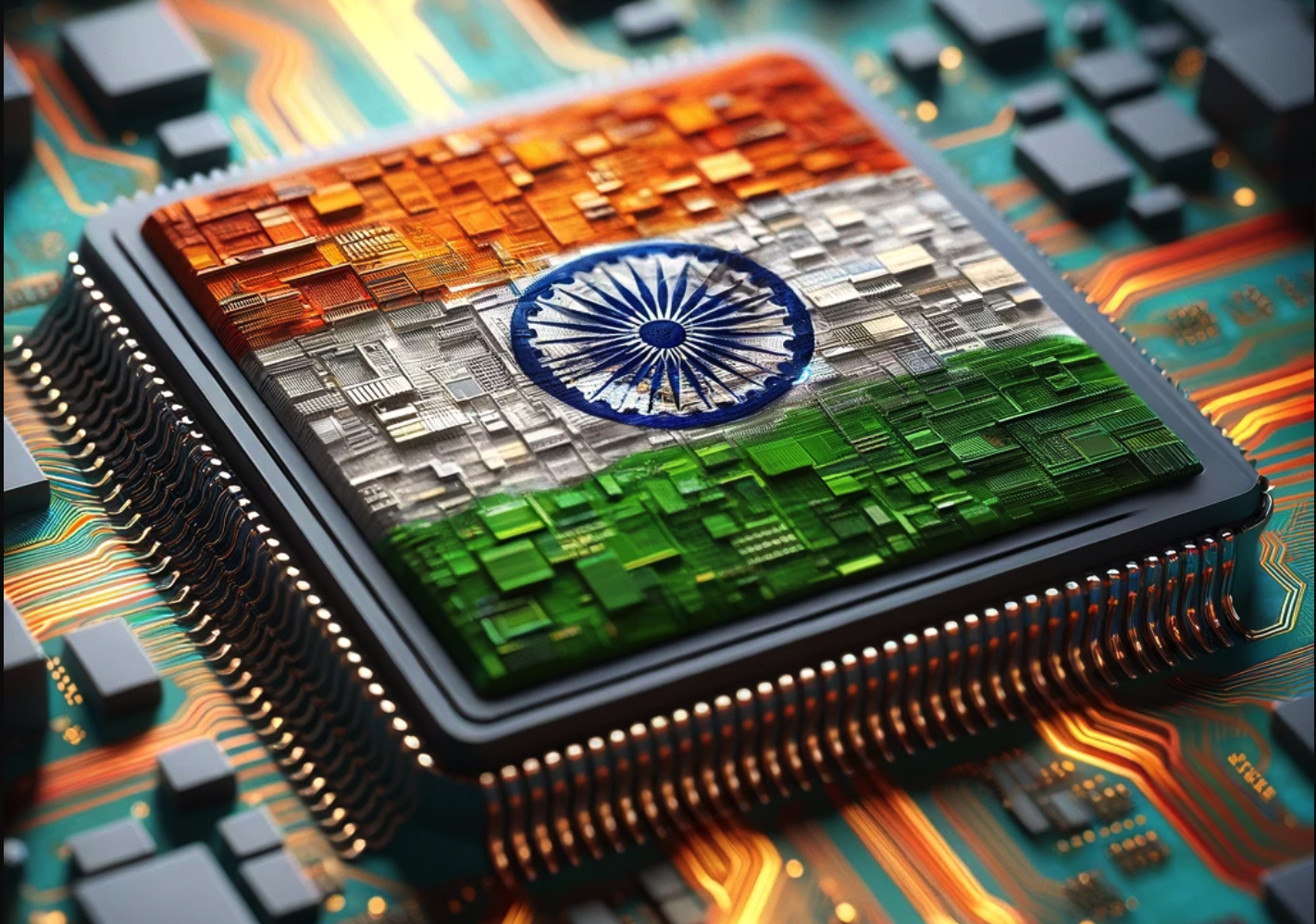
- 02 Mar 2024
Why is it in the News?
The Union Cabinet recently approved the country's first semiconductor fab to be made by the Tata Group in collaboration with Powerchip Taiwan.
What is Semiconductor Fabrication?
- The semiconductor fabrication process is a complex and highly specialized series of steps that transform raw materials into functional electronic components.
- This process involves a multitude of techniques and technologies, with each stage requiring precise control and attention to detail.
- A semiconductor fab -- short for fabrication -- is a manufacturing plant in which raw silicon wafers are turned into integrated circuits (ICs).
- A fab lab features a clean room where ICs are etched onto wafers.
- The completed chips are sent to a back-end assembly and test facility before they are packaged and sold.
- A semiconductor fab facility always includes a clean room -- so known because its environment is carefully controlled to eliminate dust and vibrations and to keep the temperature and humidity within a specific narrow range.
- Contamination can enter the fab environment through external sources, resulting in damage to products that can affect overall yield.
- To minimize the losses, all potential sources of contamination are thoroughly analysed and cleaned.
- For example, the tools used in the chip manufacturing process have low levels of particulates and fibres.
- The goal is to ensure that extraneous contamination is not introduced into the semiconductor fab to ensure the highest quality of the final products.
Technology Used in Semiconductor Fab Labs:
- Photolithography: Photolithography is a crucial optical process in the fabrication process, as it is used to create intricate circuit patterns on a single wafer's surface.
- This is achieved by coating the wafer with a photosensitive material, called a photoresist, and then exposing it to high-wavelength deep ultraviolet (DUV) or extreme ultraviolet (EUV) light through a mask containing the desired pattern.
- The exposed photoresist undergoes a chemical change, which allows it to be selectively removed.
- It leaves behind a patterned layer that serves as a protective layer for subsequent processing steps, such as etching and deposition.
Minimum age to cast postal ballots hiked to 85 years
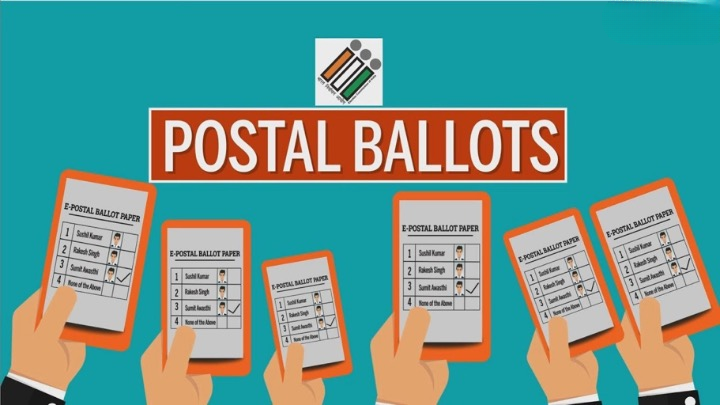
- 02 Mar 2024
Why is it in the News?
For the upcoming Lok Sabha and State Assembly elections, senior citizens who are 85 years and older will be able to opt for postal ballots as the government recently amended the rule to increase the eligibility from the current limit of 80 years and above.
News Summary:
- The government, in collaboration with the Election Commission, has introduced amendments to the Conduct of Election Rules (1961), specifically targeting the eligibility criteria for voting by postal ballot.
- Notably, the minimum age for senior citizens eligible for postal voting has been increased from 80 years to 85 years.
- Previously, Rule 27A of the Conduct of Election Rules had extended the postal ballot facility to senior citizens above 80 years, persons with disabilities, poll officers, and individuals diagnosed with COVID-19.
- This provision was first implemented during the 2020 Bihar assembly polls, coinciding with the onset of the pandemic.
- Despite the initial extension of postal voting rights to senior citizens aged 80 and above, a subsequent review by the Election Commission revealed that only a small fraction, approximately 2-3%, of eligible voters in this age group opted for postal ballots.
- The majority preferred to physically visit polling stations to cast their votes.
- Considering the statistics indicating that the total number of senior citizens above 80 years stands at 1.75 crore, with 98 lakh falling within the age range of 80-85 years, the government deemed it necessary to amend the existing rule.
- This adjustment reflects a nuanced approach aimed at ensuring efficient electoral processes while addressing the preferences and needs of elderly voters.
What is Postal Voting?
- Postal voting is only available to a specific group of voters.
- By retyping her choices on the ballot paper and returning it to the inspection officer before counting, a voter can remotely cast her ballot using this feature.
Who Can Avail This?
- Armed forces members such as those in the Army, Navy, and Air Force, armed police officers serving outside their home states, government workers stationed outside of India, and their wives are only eligible to vote by mail.
Features:
- Voters may use this service from any location outside of the designated constituency.
- This system makes it easier to create voter electoral roll data for services.
- It has two layers of security, making it a secure system:
- 1. Downloading the encrypted electronically transmitted postal ballot (ETPB) file requires an OTP (one-time password).
- 2. To decrypt, print, and deliver ETPB, a PIN is necessary.
- By sending postal ballots electronically to eligible service voters, this system addresses the time constraint associated with mailing postal ballots.
- The specific quick response code ensures confidentiality and prevents the duplication of cast ETPB.
Concerned Raised by Political Parties:
- Parties argue that allowing voters 65 and older to cast postal ballots violates voting confidentiality since many of the population lacks education and may ask for help from others at various points, ultimately identifying their chosen candidate.
- Their exposure to "administrative influence or influence by the government or the ruling party" also results from this.
How the development of Agaléga figures in India’s vision for its maritime neighbourhood
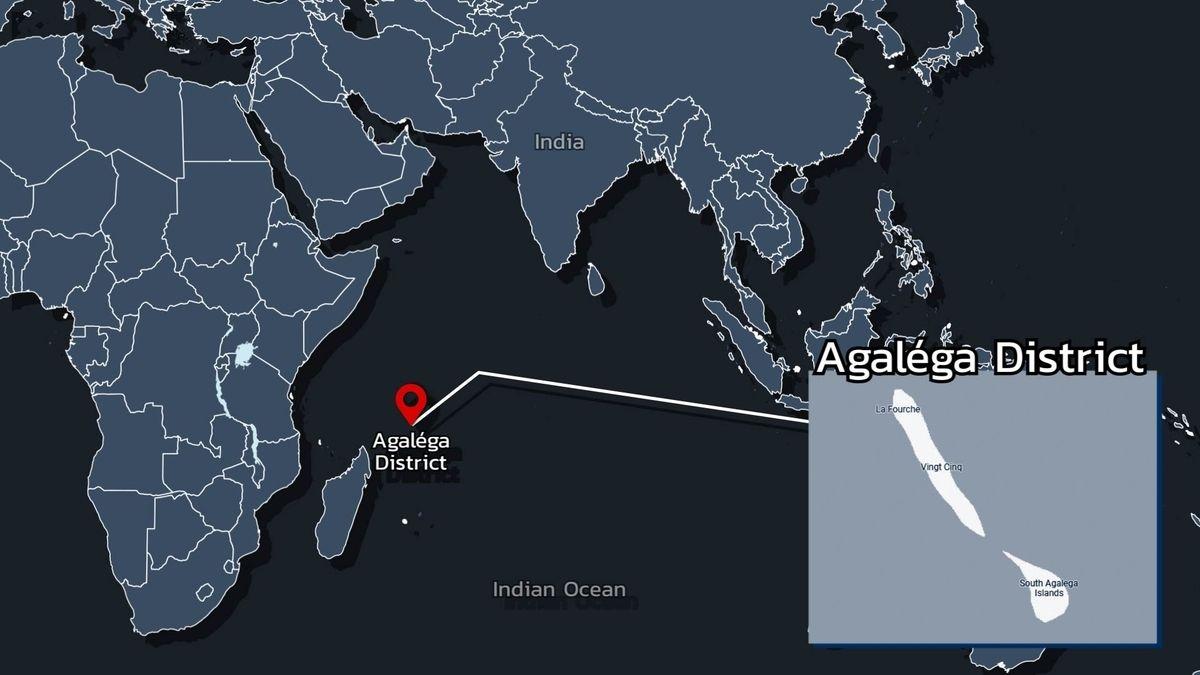
- 02 Mar 2024
Why is it in the News?
Recently, Prime Ministers Narendra Modi and Pravind Jugnauth jointly inaugurated an airstrip and the St James Jetty on North Agaléga Island in the Indian Ocean.
About Agalega Islands:
- Agaléga Island comprises two islets, a long and thin northern island and a shorter, round southern island.
- It is slightly over 3,000 kilometres from the nearest mainland Indian coast, deep in the Indian Ocean near Madagascar.
- Despite its pristine appeal, Agaléga remains largely undiscovered by tourists and there are no hotels, water bungalows, or bustling tourist shops.
- Instead, approximately 300 islanders sustain themselves through coconut cultivation and fishing, maintaining a way of life passed down through generations.
Importance of Agalega Islands:
- The development of the Agalega Islands holds significant socio-economic and national security implications for Mauritius, aligning closely with India's maritime vision.
- Despite being a dependency of Mauritius, the islands have long remained underdeveloped, posing challenges to the sustainability and well-being of their inhabitants.
- Necessities often required referral to Mauritius due to the lack of infrastructure.
- Moreover, the absence of an official government or security presence posed a serious vulnerability, necessitating urgent attention.
- Recognizing the potential to transform this vulnerability into a strategic asset, Mauritius prioritized the development of the islands and the establishment of facilities capable of accommodating ships and aircraft.
- In this regard, the construction of a jetty and an airstrip emerged as imperative steps to bolster the islands' infrastructure.
- Given the shared interests and cooperation between Mauritius and India, the government of Mauritius selected India as its preferred development partner for this ambitious initiative.
Why did Mauritians Choose India?
- Ties between India and Mauritius go back to 1948, 20 years before the country’s independence from Britain.
- Seventy percent of the inhabitants of Mauritius are of Indian origin, and the two countries share deep historical, social, and cultural bonds.
- The consistent feature in the history of bilateral relations has been friendship and trust at all levels — the political leadership, the diplomatic and military communities, as well as between the peoples of the two countries.
- The development of these strategically located islands required trust more than anything else. India was the obvious choice.
Significance for India:
- The goodwill and trust between the two countries will be further enhanced. India will welcome opportunities to further develop these islands in collaboration with Mauritius as the latter deems appropriate.
- The joint development of Agaléga underscores India’s commitment to the vision of Security And Growth for All in the Region (SAGAR), and its willingness to assist smaller maritime nations in building capacity and developing capability.
- It will indicate to other maritime neighbours that India is a benign and friendly country that respects the sovereignty of independent nations.
- India would like to emerge as the preferred development and security partner in the Indian Ocean Region.
PM Modi launches India’s first hydrogen-powered ferry built at Cochin Shipyard
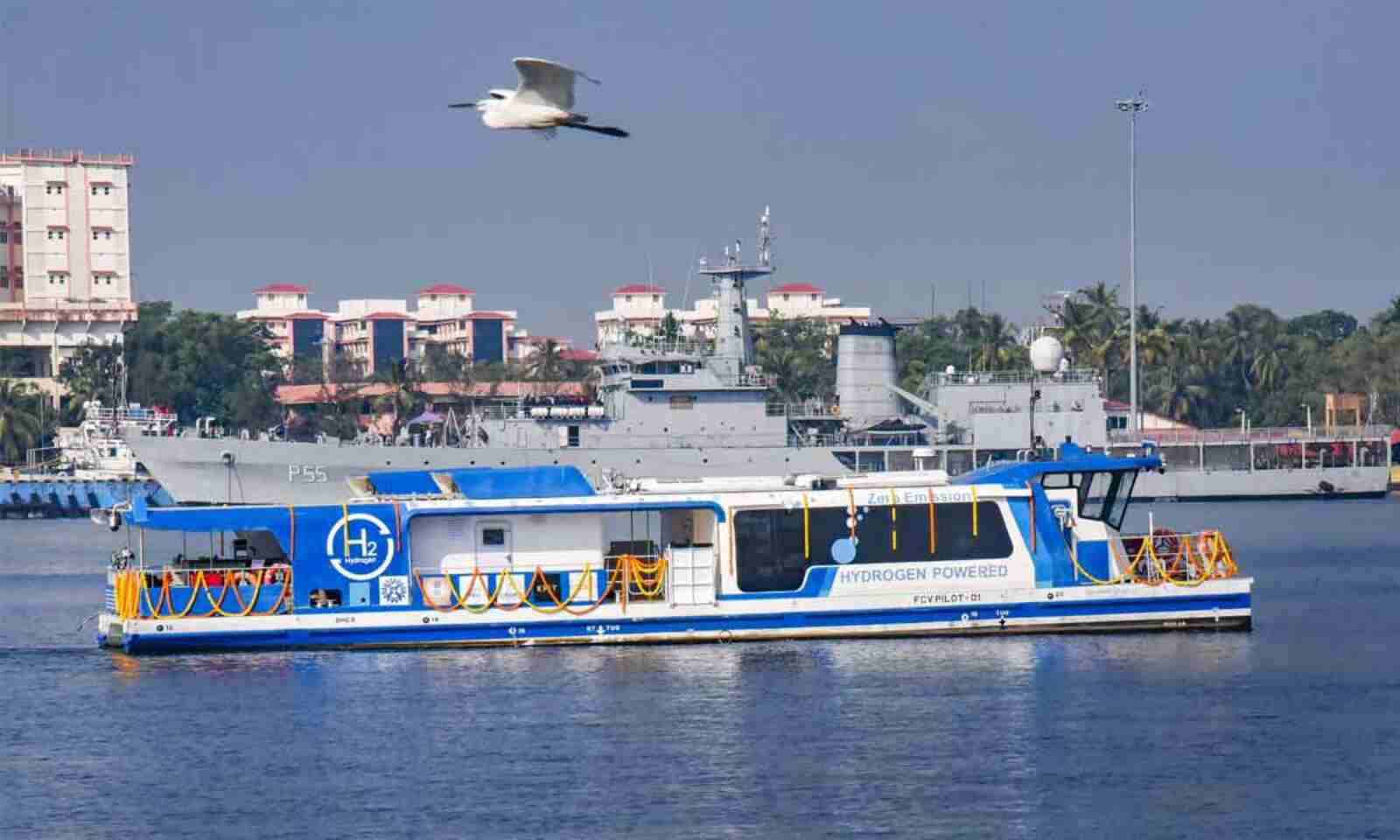
- 01 Mar 2024
Why is it in the News?
Prime Minister Modi recently virtually launched India’s first indigenously developed hydrogen fuel cell ferry manufactured by Cochin Shipyard Limited (CSL), which will be deployed for service at Varanasi in Uttar Pradesh.
What is the "Harit Nauka" (Green Boat) Initiative?
- Initiated by the Ministry of Ports, Shipping, and Waterways, "Harit Nauka" aims to facilitate a sustainable transition of inland vessels.
- In January 2024, the shipping ministry introduced the "Harit Nauka" guidelines, outlining the path towards environmentally friendly practices for inland vessels.
- According to these guidelines, all states are mandated to progressively adopt green fuels for 50% of their inland waterway-based passenger fleets within the next decade, to achieve 100% adoption by 2045. This initiative aligns with the Maritime Amrit Kaal Vision 2047, aimed at reducing greenhouse gas emissions.
- The implementation of this initiative not only contributes to reducing emissions but also paves the way for replicating such environmentally friendly ferry models across the country to enhance urban mobility.
- Furthermore, it serves as a significant catalyst for advancing the objectives of the National Green Hydrogen Mission.
What are Hydrogen Fuel Cells?
- Hydrogen fuel cells harness the chemical energy of hydrogen to generate electricity, offering a clean energy solution with electricity, heat, and water as the sole products and by-products.
Functioning:
- Similar to batteries, fuel cells continuously produce electricity and heat as long as fuel is supplied. A typical fuel cell comprises two electrodes—an anode (negative electrode) and a cathode (positive electrode)—surrounding an electrolyte.
- Hydrogen fuel is supplied to the anode, while air is directed to the cathode. At the anode, a catalyst separates hydrogen molecules into protons and electrons, which then travel different paths.
- Electrons create an electric current through an external circuit, while protons migrate through the electrolyte to the cathode, combining with oxygen and electrons to form water and heat.
Challenges in India:
- High Cost: Fuel cell systems remain relatively expensive compared to conventional energy sources.
- Infrastructure Deficiency: India currently lacks the necessary infrastructure for the widespread adoption of fuel cell technology, including hydrogen production and distribution networks.
- Technical Hurdles: Despite ongoing advancements, fuel cell technology is still in its nascent stages, facing persistent technical challenges.
- Policy Constraints: The absence of a comprehensive policy framework from the Indian government has constrained the development and adoption of fuel cell technology, impeding research and investment.
India's Initiatives:
- In response to these challenges, India has formulated the National Green Hydrogen Policy, delineating a vision for the growth of the hydrogen and fuel cell industry.
- The policy aims to position India as a global hub for the production, utilization, and export of Green Hydrogen and its derivatives, signalling a strategic commitment to advancing sustainable energy solutions.
Characteristics of the Hydrogen-Powered Ferry:
- Length and Capacity: The hydrogen fuel cell vessel is a 24-meter-long catamaran, capable of accommodating up to 50 passengers in its air-conditioned passenger area.
- Battery-Free Operation: Distinguished by its innovative design, this ferry does not rely on conventional batteries for storing electrical energy.
- Instead, it utilizes hydrogen fuel, stored in cylinders onboard the vessel. With five hydrogen cylinders capable of carrying 40kg of hydrogen, the ferry can sustain operations for eight hours. Additionally, it features a 3-kW solar panel to complement its power source.
- Fuel Cell Technology: Equipped with a 50-kW PEM (proton-exchange membrane) fuel cell, coupled with Lithium-Ion Phosphate batteries, the ferry boasts adaptability in response to varying power demands.
- PEM fuel cells, renowned for their lower operating temperature, lightweight, and compactness, are commonly employed in automotive applications.
- Environmental Sustainability: With zero emissions and noise, coupled with enhanced energy efficiency, the hydrogen fuel cell-powered ferry stands as an environmentally friendly alternative.
- Its minimal moving parts contribute to reduced maintenance requirements compared to combustion vessels.
- Additional Advantages: While hydrogen fuel cell technology has been in development for maritime purposes, only a handful of countries worldwide have executed demonstration projects.
- Thus, this ferry positions India at the forefront, providing an early advantage in harnessing the potential of hydrogen as an emerging green fuel within the marine sector.
Doomsday Glacier has lost 50 billion tons of ice, melting began 80 years ago
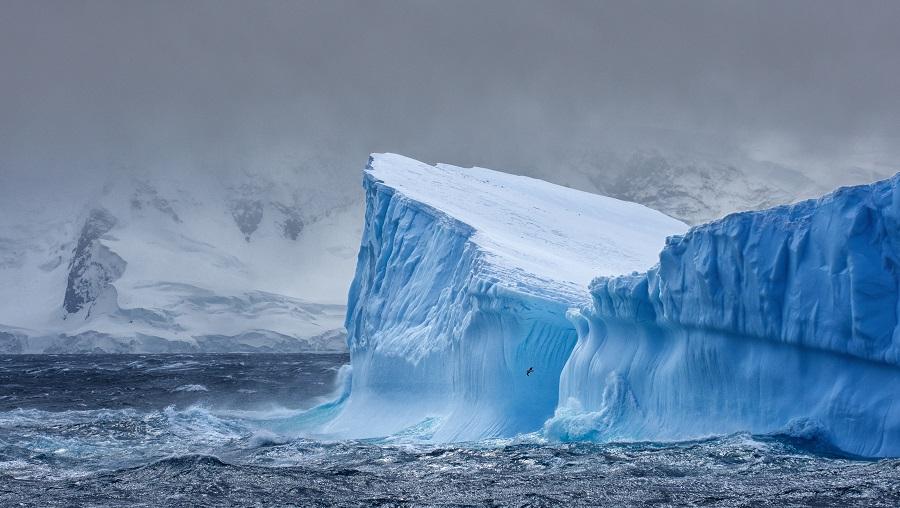
- 01 Mar 2024
Why is it in the News?
Antarctica's Doomsday Glacier, the world's widest glacier, has lost over 50 billion tons of ice and the melting rate is on the rise as the continent gets warmer.
What is Doomsday Glacier?
- The Thwaites Glacier (also known as Doomsday Glacier), a massive and world’s widest glacier is located in West Antarctica.
- The Doomsday nickname reflects the potential for catastrophic flooding if the glacier were to collapse completely.
- Scientists are particularly concerned about Thwaites Glacier because of its size and location.
- If it were to collapse or significantly retreat, it could lead to a more rapid flow of ice from the interior of West Antarctica into the ocean, contributing to rising sea levels.
- The collapse could lead to a 65 cm rise in global sea level.
- The ice loss in the region has been observed to be accelerating since the 1970s, however, so far it remained unclear as to when this retreat began.
- The significant glacial retreat began in the 1940s and the findings coincide with previous work that studied retreat on Pine Island Glacier and found glacial retreat began in the ‘40s as well.
- This change is not random nor specific to one glacier but It is part of a larger context of a changing climate.
Why Did the Melting Begin?
- The meeting was kicked off by an extreme El Nino climate pattern that warmed the west Antarctic, and since then the glacier has not been able to recover from the damage.
- It is significant that El Niño only lasted a couple of years, but the two glaciers, Thwaites and Pine Island remain in significant retreat.
- Once the system is kicked out of balance, the retreat is ongoing.
- The Doomsday Glacier's melting remains one of the most crucial events triggered and accelerated by climate change and could lead to the submergence of several coastal regions of the world.
ZSI names a newly discovered head-shield sea slug after President Droupadi Murmu
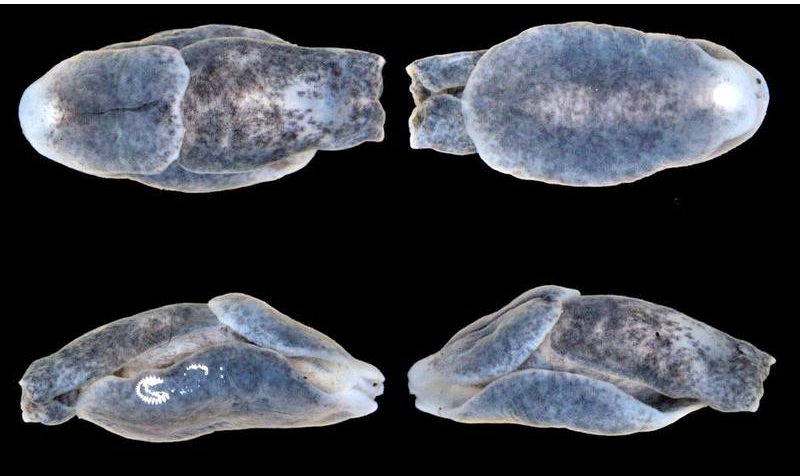
- 01 Mar 2024
Why is it in the News?
The Zoological Survey of India named a new marine species of head-shield sea slug with ruby red spot which was discovered from West Bengal and Odisha coast after President of India Droupadi Murmu.
About Melanochlamys Droupadi:
- Melanochlamys Droupadi is a newly discovered marine species of head-shield sea slug distinguished by its striking ruby red spot.
- This species, belonging to the Melanochlamys genus, was first identified along the coasts of Digha in West Bengal and Udaipur in Odisha.
Key Features:
- This small invertebrate typically measures up to 7 mm in length.
- It primarily inhabits wet and soft sandy beaches.
- Adorned in brownish-black hues, it features a distinctive ruby-red spot towards its hind end.
- Melanochlamys Droupadi exhibits hermaphroditic characteristics, possessing both male and female reproductive organs. However, it requires another sea slug for successful reproduction.
- Internally, it possesses a shell and a posterior segment comprising 61 per cent of its body length.
- To safeguard against sand infiltration, it continuously secretes transparent mucus, forming a protective sheath around its body.
- When in motion, it burrows beneath smooth sand, creating a moving capsule where its body remains mostly concealed, akin to a turtle, leaving behind a discernible trail.
What are Sea Slugs?
- Sea slugs are a diverse group of molluscs inhabiting marine environments, characterized by their slug-like appearance.
- They occupy a wide range of habitats, spanning from shallow intertidal zones to the depths of the ocean, and from polar regions to tropical waters.
- As agile predators, sea slugs prey on mobile organisms such as other shelled and unshelled sea slugs, roundworms, marine worms, and small fish.
- Currently, researchers have identified 18 species of sea slugs worldwide.
- While sea slugs predominantly inhabit temperate regions within the Indo-Pacific Oceanic realm, three species exhibit truly tropical distributions: Melanochlamys papillata from the Gulf of Thailand, Melanochlamys bengalensis from the West Bengal and Odisha coast, and the newly discovered species.
World's First Vedic Clock to be Unveiled by PM Modi in Ujjain

- 01 Mar 2024
Why is it in the News?
Prime Minister Narendra Modi inaugurated the Vedic Clock in Ujjain as part of the 'Vikramotsav' celebration in Madhya Pradesh.
Features of the Vikramaditya Vedic Clock:
- This is the world's first 'Vedic Clock', designed to display time according to the ancient Indian traditional Panchang (time calculation system).
- The clock is installed on an 85-foot high tower constructed at Jantar Mantar in Ujjain, adjacent to the Government Jiwaji Observatory.
- It will display 30 Muhurats, tithi, and all other time calculations of Vedic Hindu panchang.
- Additionally, Samvat, Mas, moon position, Parva, Shubhshubh Muhurat, Ghati, Nakshatra, solar eclipse, and lunar eclipse, among other things
- It will be the world’s first clock in which Indian time calculation will be displayed.
- The Vedic clock installed in Ujjain as the city has been considered the centre of time calculation.
- The Tropic of Cancer passes through Ujjain.
Time calculation:
- The unique timepiece calculates time-based on Vedic Hindu Panchang, planetary positions, Muhurat, astrological calculations, solar eclipse, and lunar eclipse, among other things, and also indicates the Indian Standard Time (IST) and Greenwich Mean Time (GMT).
- The period from one sunrise to the next is used to calculate time.
- The clock will calculate time from one sunrise to another.
- The time period between the two sunrises will be divided into 30 parts, with each hour consisting of 48 minutes according to ISD.
- The reading will start from 0.00 with the sunrise functions for 30 hours (an hour of 48 minutes).
- Also, there will be a dedicated mobile application for the readings of the Vedic Clock, and citizens will be able to use it on their smartphones, computers, televisions, and other devices.
Why It is Located in Ujjain?
- The standard time of the world was determined from Ujjain 300 years ago.
- Throughout the world, the time prescribed and transmitted from Ujjayini (Ujjain) has been followed.
- The shortest fraction of time is included in Indian time calculations based on the Indian astronomical theory and the motions of planetary constellations.
- Ujjain was previously thought to be India’s central meridian, and the city determined the nation’s time zones and time differences, according to Hindu astronomical belief.
- The city of Lord Mahakal is situated exactly where the Tropic of Cancer and Zero Meridians meet.
- Additionally, it is situated in the oldest observatory in India, which Sawai Jai Singh II of Jaipur constructed in the early 1700s.
- Mirzapur in Uttar Pradesh, which is located at 82°30’ East longitude, is the location of the zero meridians on the Prime Meridian, or IST, four hours ahead of GMT, according to the 1884 convention on meridians.
India to set up International Big Cat Alliance
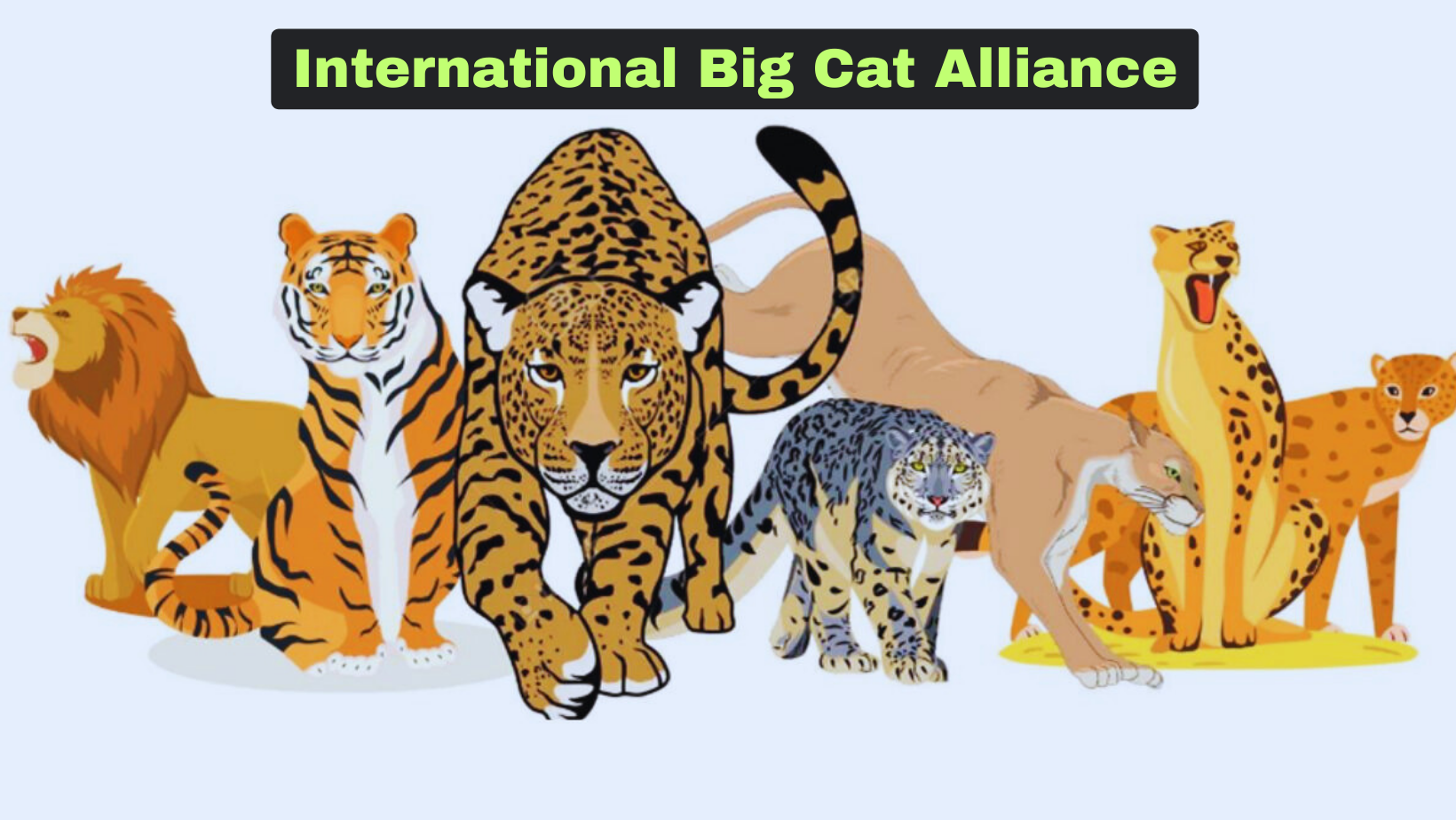
- 01 Mar 2024
Why is it in the News?
The Union Environment Ministry plans to set up and coordinate an International Big Cat Alliance (IBCA), along the lines of the International Solar Alliance, an India-headquartered initiative to promote solar installations globally.
About the International Big Cat Alliance (IBCA):
- The idea of the International Big Cat Alliance (IBCA) was first given by Prime Minister Modi during his speech on the occasion of Global Tiger Day in 2019.
- He called for developing an alliance of global leaders to curb poaching in Asia.
- The alliance was formally announced on April 9, 202, in Mysuru, as India commemorated the completion of 50 years of Project Tiger.
- The alliance will focus on the conservation of seven big cats, which include Tiger, Lion, Leopard, Snow Leopard, Puma, Jaguar, and Cheetah. Out of these, five are found in India.
- Membership to the IBCA is open to 97 'range' countries, encompassing the natural habitats of these big cats, as well as other interested nations and international organizations.
- The alliance aims to facilitate cooperation among countries to advance the conservation agenda for mutual benefit.
- Operating with a multifaceted approach, the IBCA endeavours to establish robust linkages across various domains, including knowledge sharing, capacity building, networking, advocacy, financial and resource support, research, technical assistance, education, and awareness.
- Governance of the alliance consists of a General Assembly comprising all member countries, a Council comprised of seven to fifteen member countries elected by the General Assembly for a five-year term, and a Secretariat.
- The IBCA Secretary General, appointed by the General Assembly upon the Council's recommendation, serves a specific term.
- To support its initiatives, the IBCA has secured initial funding of Rs. 150 crore from the Government of India for the period spanning from 2023-24 to 2027-28.
RBI tweaks norms related to the Regulatory Sandbox scheme

- 29 Feb 2024
Why is it in the News?
The Reserve Bank recently tweaked guidelines for the Regulatory Sandbox (RS) scheme under which participating entities will have to comply with digital personal data protection norms.
About the Regulatory Sandbox Scheme:
- The Regulatory Sandbox scheme denotes a controlled regulatory environment where new products or services can undergo live testing.
- Functioning as a "safe space" for businesses, regulators may offer certain relaxations for testing purposes within this environment.
- It serves as a structured platform for regulators to engage with the industry and develop regulations that foster innovation and enable the delivery of cost-effective financial products.
- The scheme holds potential as a tool for creating dynamic regulatory environments that adapt to emerging technologies through evidence-based learning.
Objectives:
- Offering innovative technology-led entities an opportunity for limited-scale testing of new products or services, potentially involving regulatory relaxations before broader implementation.
- At its core, the Regulatory Sandbox is a formal program allowing market participants to test new products, services, or business models in live settings, under appropriate oversight.
- Proposed financial services under the scheme should leverage new or emerging technology to address consumer needs or offer benefits.
- The overarching goal is to promote responsible innovation in financial services, enhance efficiency, and deliver consumer benefits.
- The Reserve Bank of India (RBI) introduced the 'Enabling Framework for Regulatory Sandbox' in August 2019 after extensive consultations.
- The updated framework mandates compliance with the Digital Personal Data Protection Act of 2023 for sandbox entities.
- Furthermore, the timeline for various stages of the Regulatory Sandbox process has been extended from seven to nine months.
- Fintech companies, including startups, banks, financial institutions, and other entities providing support to financial services businesses, are among the target applicants for entry into the Regulatory Sandbox.
PM Modi lays stone for India’s second spaceport at Kulasekarapattinam
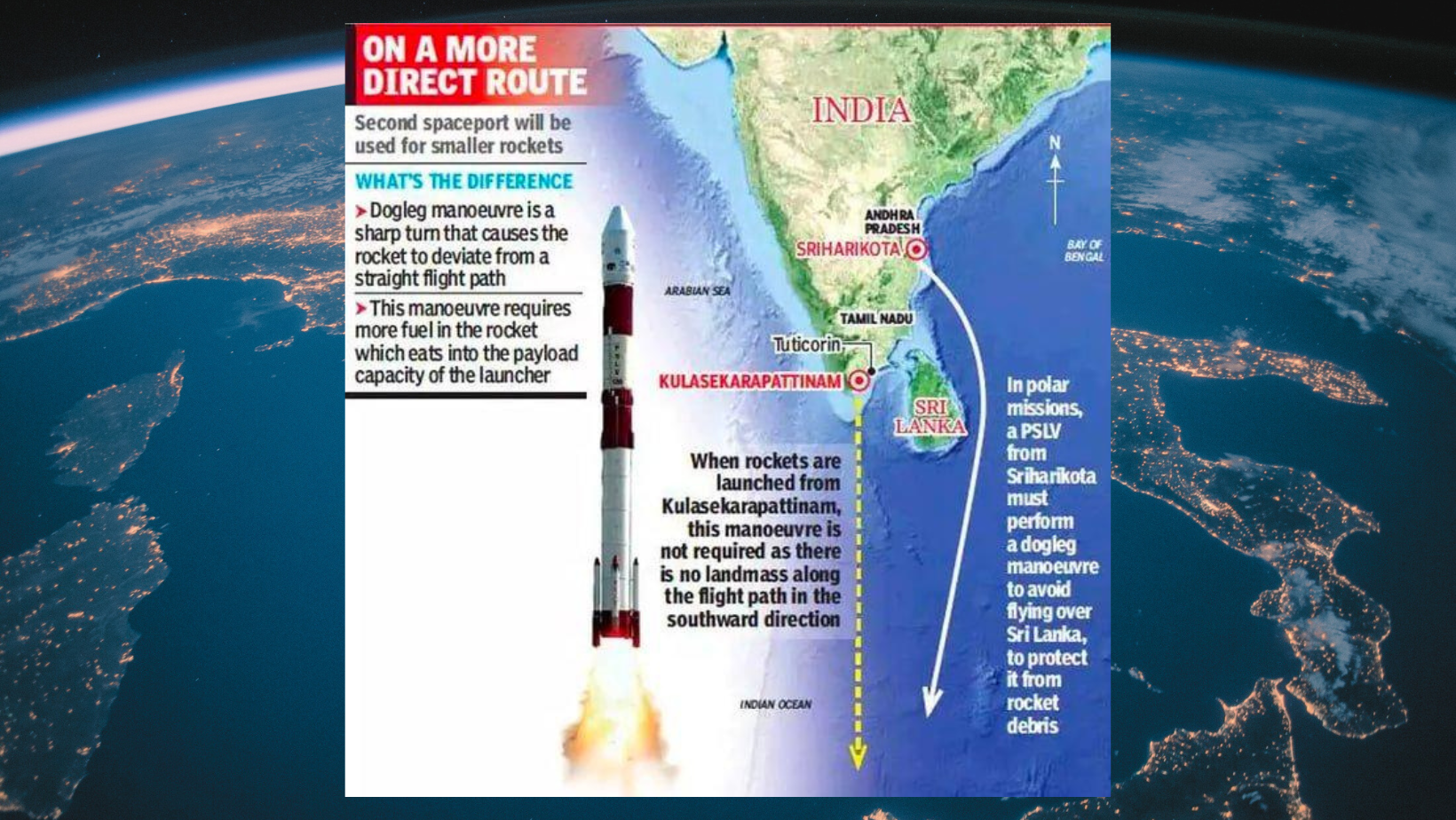
- 29 Feb 2024
Why is it in the News?
Prime Minister Narendra Modi laid the foundation stone for the country’s second spaceport at Kulasekarapattinam in Tuticorin district recently.
About Kulasekarapattinam Spaceport:
- The Kulasekarapattinam Spaceport is a forthcoming space launch facility located in Kulasekarapattinam, a coastal village near the temple town of Tiruchendur in Thoothukudi district, southern Tamil Nadu.
- It will become the second operational spaceport in India after the Satish Dhawan Space Centre, established in Sriharikota, Andhra Pradesh, in 1971, and will feature two launch pads.
- The primary focus of the Kulasekarapattinam Spaceport will be to facilitate the commercial launch of Small Satellite Launch Vehicles (SSLVs).
- Spanning 2,350 acres, the spaceport will comprise 35 essential facilities, including a launch pad, rocket integration facilities, ground range and checkout facilities, and a mobile launch structure (MLS) equipped with checkout computers.
- With the capability to launch up to 24 satellites annually using a mobile launch structure, it offers a strategic advantage by enabling direct southward launches over the Indian Ocean, thus conserving fuel for small rocket launches.
- This stands in contrast to the Satish Dhawan Space Centre, where launching into a polar orbit necessitates additional fuel due to the curved trajectory required to avoid crossing landmasses, particularly Sri Lanka.
- The estimated cost of the Kulasekarapattinam Spaceport project is Rs. 986 crore.
About the Small Satellite Launch Vehicles (SSLVs):
- The SSLV, or Small Satellite Launch Vehicle, is a three-stage launch vehicle characterized by three solid propulsion stages and a liquid propulsion-based Velocity Trimming Module (VTM) serving as a terminal stage.
- Measuring 2 meters in diameter and 34 meters in length, the SSLV boasts a lift-off weight of 120 tonnes.
- Designed for versatility, the SSLV can effectively launch a 500kg satellite into a 500 km planar orbit.
- Notable features of the SSLV include its cost-effectiveness, rapid turnaround time, ability to accommodate multiple satellites, feasibility for launch-on-demand, and minimal infrastructure requirements.
New waste management technology could improve life in rural India
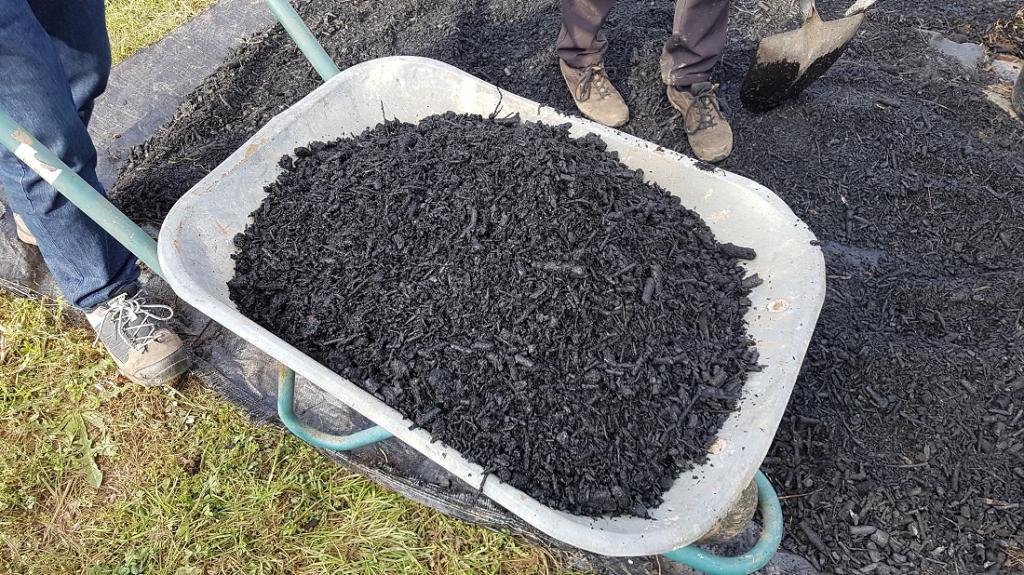
- 29 Feb 2024
Why is it in the News?
A new waste management technology that allows pyrolysis at a community level could help rural Indians cut indoor air pollution, improve soil health, and generate clean power, a recent study has claimed.
What is BioTRIG?
- BioTRIG represents a novel waste management technology centered around pyrolysis, poised to mitigate indoor air pollution, enhance soil quality, and foster clean energy generation across rural India.
- This community-oriented pyrolysis system is ingeniously crafted to utilize locally generated waste, offering a sustainable solution tailored to village environments.
- The innovative process yields three valuable by-products: bio-oil, syngas, and biochar fertilizer, presenting multifaceted benefits for rural communities, from cleaner energy sources to enhanced agricultural productivity.
- Moreover, the self-sustaining nature of BioTRIG enables the utilization of syngas and bio-oil to fuel subsequent pyrolysis cycles, with excess electricity catering to local energy needs, fostering self-reliance and sustainability.
- By harnessing the clean-burning properties of bio-oil and the soil-enriching qualities of biochar, BioTRIG empowers rural households to transition away from traditional cooking fuels while concurrently enhancing agricultural resilience and carbon sequestration efforts.
Significance:
- Computer simulations indicate that the BioTRIG system holds the potential to significantly mitigate greenhouse gas emissions from communities, potentially reducing them by nearly 350 kg of CO2-eq per capita per year.
- This projection underscores a noteworthy positive influence on both climate emissions and public health.
- The BioTRIG technology could mark a paradigm shift in waste management practices and energy generation methods within rural India, promising transformative benefits for communities.
What is Pyrolysis?
- Pyrolysis is a transformative chemical recycling method that disassembles residual organic matter into its fundamental molecular components.
- This innovative process entails confining the waste within an oxygen-deprived enclosure and subjecting it to temperatures exceeding 400 degrees Celsius.
Education Minister launches SWAYAM Plus platform
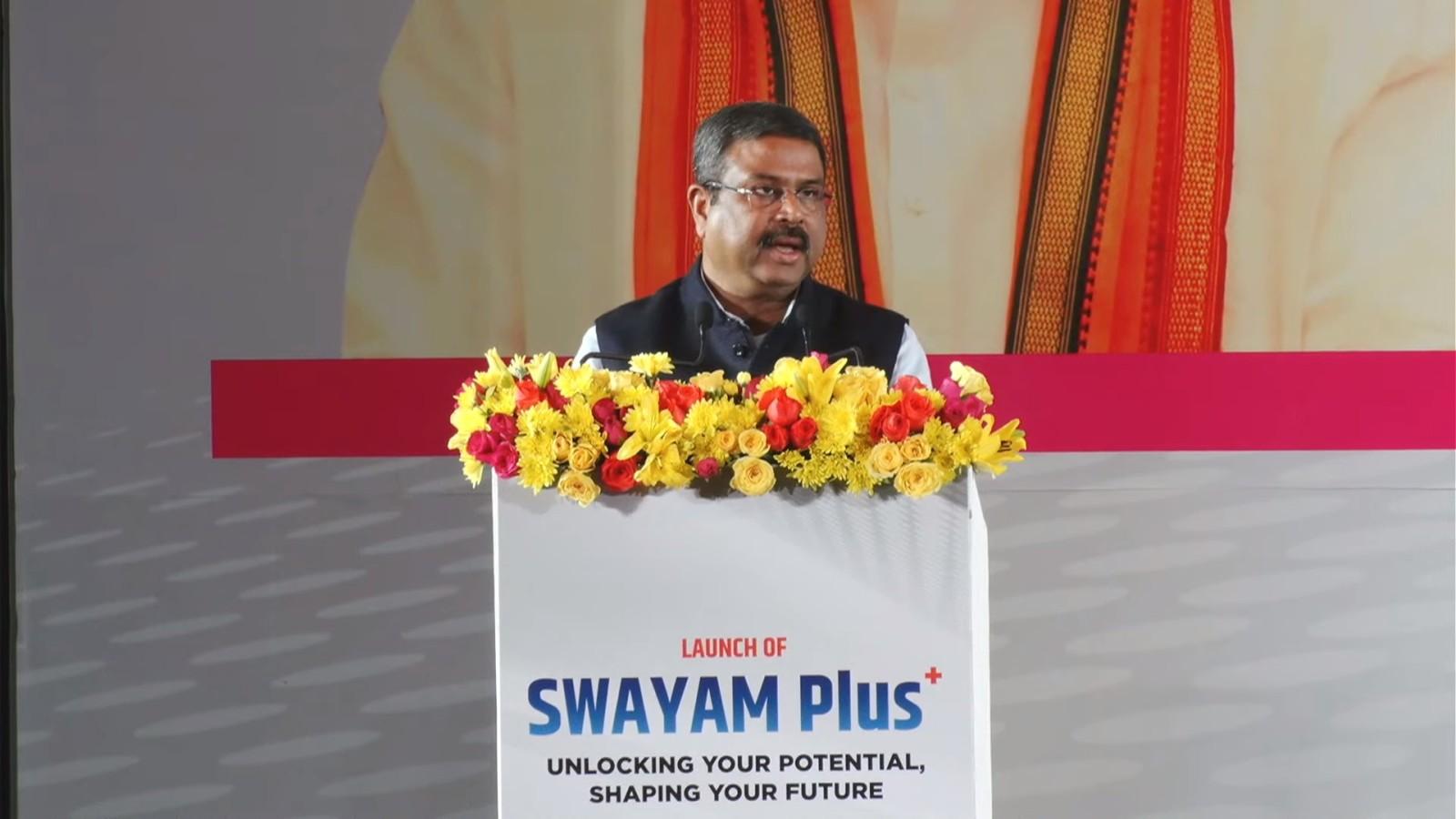
- 29 Feb 2024
Why is it in the News?
The Union Minister of Education and Skill Development and Entrepreneurship Dharmendra Pradhan recently launched the ‘SWAYAM Plus’ platform to offer courses developed collaboratively with the industry.
About the SWAYAM Plus Platform:
- SWAYAM is a Massive Open Online Course (MOOC) platform providing educational opportunities by bringing the best teaching and learning resources to everyone.
- Operated by the Indian Institute of Technology (IIT)-Madras, this platform aims to extend educational opportunities to both traditional students and working professionals, aligning with the provisions of the NEP 2020 for flexible entry and exit points in education.
- By enabling individuals to balance work and studies through online courses, SWAYAM Plus empowers them to enhance their skills and career prospects, thus contributing to India's knowledge economy.
Objectives and features:
- SWAYAM Plus primarily focuses on achieving the following:
- Building an ecosystem for all stakeholders in professional and career development, including learners, course providers, industry, academia, and strategic partners;
- Enabling a mechanism that provides credit recognition for high?quality certifications and courses offered by the best industry and academia partners;
- Reaching a large learner base by catering to learning across the country, with a focus on reaching learners from tier 2 and 3 towns and rural areas and Offering employment-focused courses, based on learner needs – across chosen disciplines with options to learn through resources in vernacular languages.
- Enhanced employability: SWAYAM Plus empowers individuals to balance work and studies through online courses, enhancing skills and career prospects.
- Industry partnerships: Courses are tailored to industry requirements in collaboration with industry leaders.
Key features:
- Multilingual content, AI guidance, credit recognition, and pathways to employment are prominent features.
Implementation and reach:
- SWAYAM Plus aims to offer high-quality courses with credit recognition, reaching learners nationwide, especially from tier 2 and 3 towns and rural areas.
Value-added services:
- Value-added services like mentorship, scholarships, and job placements will be provided, creating a digital ecosystem for upskilling and reskilling at all education levels.
- SWAYAM, launched in 2017, had enrolled 72 lakh learners by 2023.
- Now, in line with the NEP 2020, SWAYAM Plus will incorporate courses tailored to industry requirements, developed in collaboration with industry leaders like L&T, Microsoft, and CISCO.
European Parliament adopts nature restoration law
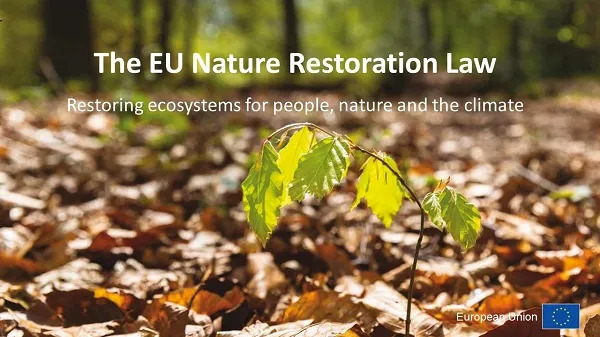
- 29 Feb 2024
Why is it in the News?
The European Parliament recently adopted the first European Union (EU) law to restore degraded ecosystems across the 27-nation political and economic bloc.
About the Nature Restoration Law:
- The Nature Restoration Law is hailed as a significant stride toward rejuvenating Europe’s natural habitats, with a staggering 81% currently classified as being in poor health.
- It sets a pioneering example for global emulation, emphasizing the criticality of safeguarding and revitalizing our natural environment for the welfare of forthcoming generations.
Objectives:
- This legislation aims to rejuvenate ecosystems, habitats, and species across the European Union's (EU) terrestrial and marine domains, fostering the enduring recuperation of diverse and robust nature.
- Additionally, it endeavors to contribute to the EU's climate mitigation and adaptation objectives while fulfilling international commitments.
- These directives aspire to encompass a minimum of 20% of the EU's land and marine territories by 2030, with the ultimate goal of restoring all ecosystems in need by 2050.
Specific Targets:
- Wetlands, forests, grasslands, rivers, lakes, heath & scrub, rocky habitats, and dunes: The objective is to enhance and restore biodiverse habitats on a large scale, fostering the recovery of species populations through habitat improvement and expansion.
- Pollinating Insects: The target is to reverse the decline of pollinator populations by 2030, aiming for a positive trajectory in pollinator numbers.
- Forest Ecosystems: The aim is to promote an upward trend in standing and fallen deadwood, varied aged forests, forest connectivity, common forest bird populations, and organic carbon reserves.
- Urban Ecosystems: The objective is to achieve zero net loss of green urban spaces by 2030 and expand the total area covered by green urban spaces by 2040 and 2050.
- Agricultural Ecosystems: The goal is to bolster grassland butterfly and farmland bird populations, increase organic carbon reserves in cropland mineral soils, and augment the proportion of agricultural land featuring diverse landscape characteristics.
About the European Union (EU):
- The European Union (EU) is a political and economic union of 27 European countries that collaborate on various issues, including trade, security, and environmental protection.
- Founded after World War II to promote peace and economic cooperation, the EU has evolved into a complex organization with its own institutions, laws, and currency (the euro).
- It operates on the principles of democracy, human rights, and the rule of law, with the European Commission, European Parliament, and European Council among its key decision-making bodies.
- The EU's single market allows for the free movement of goods, services, capital, and people across member states, fostering economic growth and prosperity.
- Additionally, the EU plays a prominent role in global affairs, advocating for multilateralism, sustainable development, and climate action.
Scientists are closer to creating a reference genome for Indians; 10,000 samples sequenced already
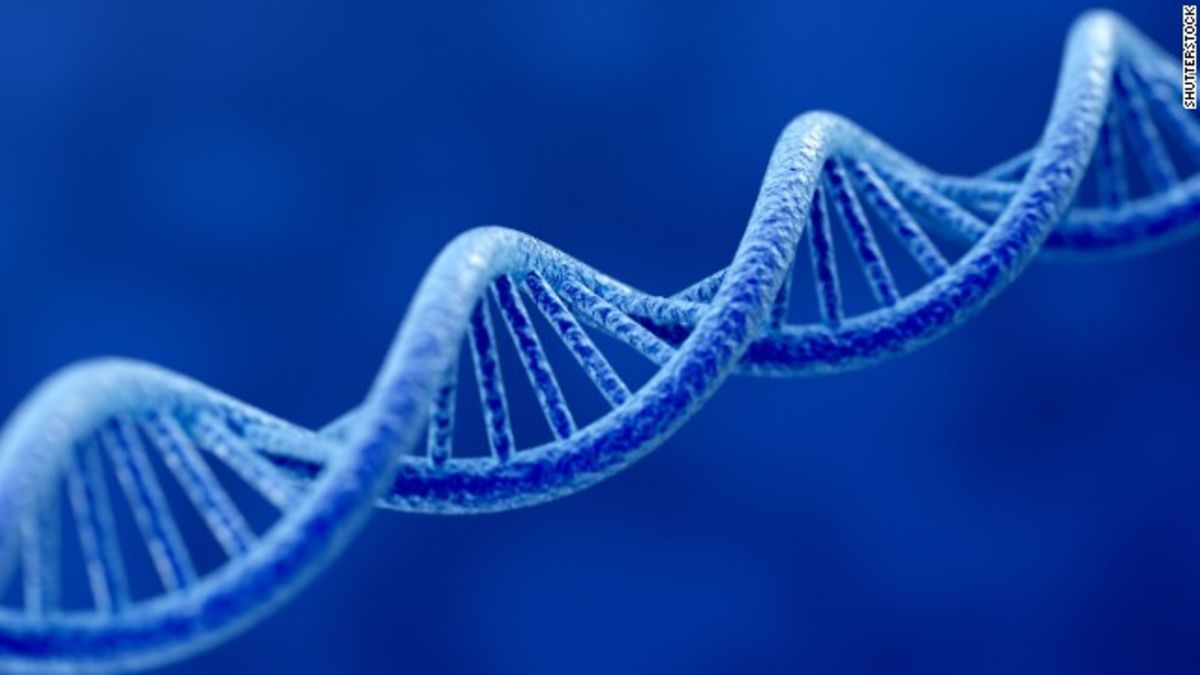
- 28 Feb 2024
Why is it in the News?
The Government’s ambitious Genome India initiative achieved a significant milestone Tuesday as researchers completed sequencing 10,000 healthy genomes from different regions of the country, representing 99 distinct populations.
News Summary:
- The Department of Biotechnology has announced the successful completion of India's '10,000 genome' project, aimed at establishing a comprehensive reference database of whole-genome sequences within the country.
- This milestone marks the creation of a detailed genetic map of India, offering significant potential for both clinicians and researchers in diverse fields.
- With India emerging as the largest genetic laboratory globally, this rich dataset is poised to catalyze advancements in the country's biology sector.
- Notably, India's bio-economy has witnessed remarkable growth, expanding from $10 billion in 2014 to over $130 billion in 2024, signaling a promising trajectory for future development.
- The entirety of the genomic dataset will be housed at the Indian Biological Data Centre (IBDC), serving as a valuable digital resource for research purposes.
- Established in 2022, the IBDC represents India's sole indigenous databank, eliminating the need for Indian researchers to rely on foreign servers for hosting biological datasets.
What is Genome Sequencing?
- Genome sequencing is the process of determining the exact order of the building blocks (nucleotides) that make up an organism's entire DNA, or genome.
- It's like reading the complete instruction manual for life, containing the information needed to create and maintain an organism.
Applications of Genome Sequencing:
- Healthcare: Doctors can diagnose diseases with greater accuracy, personalize treatments, and uncover the causes of rare conditions.
- Agriculture: Scientists can engineer crops with desired traits like disease resistance and improved yield, while breeders select animals with specific characteristics.
- Forensics: DNA profiling aids criminal investigations and paternity testing.
- Conservation: Studying the genetic diversity of endangered species helps with conservation efforts while analyzing invasive species' origins aids in controlling their spread.
What is the Human Genome Project (HGP)?
- Initiated in 1990, the Human Genome Project aimed to elucidate the entire sequence of the human genome.
- In 2023, the project culminated in the release of the latest version of the complete human genome, boasting a mere 0.3% error margin.
- Enabled by the Human Genome Project, whole-genome sequencing facilitates the examination of an individual's genome to uncover deviations from the average human genome.
- These deviations, or mutations, offer insights into an individual's susceptibility to diseases, their responsiveness to specific stimuli, and other pertinent genetic attributes.
About the Genome India Project:
- The Genome India Project stands as a pioneering initiative approved by the Department of Biotechnology, geared towards gene mapping.
- This project sets out with the ambitious objective of compiling an exhaustive repository documenting genetic diversity across the Indian populace.
- At its core, the endeavor seeks to conduct genome sequencing for more than 10,000 individuals spanning various geographic and ethnic backgrounds within India, ultimately laying the groundwork for a standardized reference genome specific to the Indian demographic.
Significance of the Genome India Project:
- Unveiling Unique Genetic Variants: The Genome India Project holds the key to unraveling genetic variants exclusive to India’s diverse population, enabling tailored drug formulations and therapeutic interventions.
- For instance, mutations like MYBPC3, linked to premature cardiac arrest and prevalent in 4.5% of Indians, underscore the necessity of region-specific genetic insights, contrasting with global rarity.
- Similarly, the discovery of the LAMB3 mutation, causing a severe skin disorder and impacting nearly 4% of the population around Madurai, emphasizes the localized genetic complexities absent in global databases.
- Comprehensive Database for India's Population: With a colossal population exceeding 1.3 billion, India boasts a mosaic of over 4,600 distinct population groups, many practicing endogamy.
- This vast demographic diversity underscores the need for a comprehensive genetic database tailored to India's populace, crucial for identifying and addressing disease-causing mutations prevalent within specific groups.
- Unlike extrapolating findings from global datasets, the Genome India Project provides precise genetic insights essential for Indian-centric healthcare strategies.
African leaders demand financial systems reform; launch ‘Africa Club’ at 37th African Union Summit
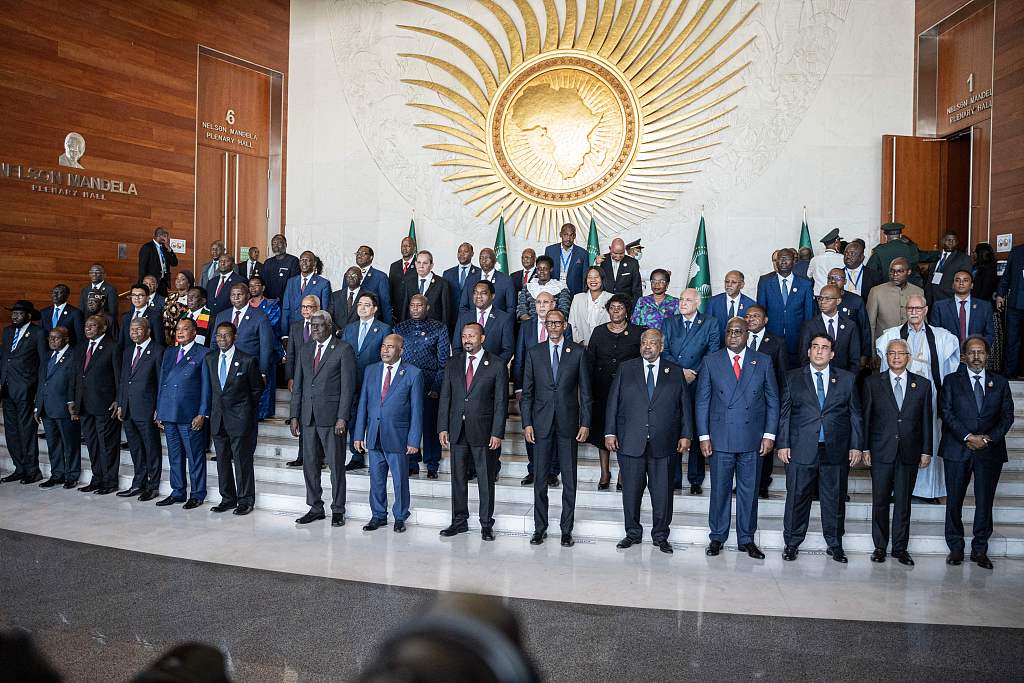
- 28 Feb 2024
Why is it in the News?
Recently, during the 37th African Union Summit, member countries initiated the formation of the Africa Club.
What is the Africa Club?
- The Africa Club is an alliance of African Multilateral Financial Institutions, established at the African Union summit, designed to enhance Africa's influence in the global financial system.
- The initiative aims to align its operations with the Sustainable Development Goals (SDGs) and the African Union's Agenda 2063, fostering innovative financial instruments, facilitating debt management discussions, and promoting collaborative efforts to address the specific needs of African nations.
- Its membership comprises key institutions such as the African Export-Import Bank, Trade and Development Bank, Africa Finance Corporation, African Reinsurance Corporation, African Trade and Investment Development Insurance, Shelter Afrique Development Bank, and ZEP – RE (PTA Reinsurance Co).
About the African Union:
- The African Union is a continental organization consisting of 55 member states across the African continent, established on May 26, 2001, in Addis Ababa, Ethiopia.
- The AU's objectives include promoting peace, security, and stability on the continent, accelerating political and socioeconomic integration, defending the sovereignty and territorial integrity of member states, and advancing sustainable development.
- It serves as a platform for African countries to coordinate their efforts in various fields, including governance, human rights, economic development, infrastructure, health, education, and culture.
- The AU's structures include the Assembly of Heads of State and Government, the Executive Council, the Pan-African Parliament, the African Court of Justice and Human Rights, and various specialized technical committees and organs.
- Through its initiatives and programs, the AU works towards realizing the vision of an integrated, prosperous, and peaceful Africa, driven by its citizens and representing a dynamic force in the global arena.
First Pey Jal Survekshan Awards to be conferred by President on 5th March

- 28 Feb 2024
Why is it in the News?
President Droupadi Murmu will present the first Pey Jal Survekshan Awards on the 5th of next month in New Delhi.
About the Pey Jal Survekshan Awards:
- The Pey Jal Survekshan Awards feature a prestigious lineup of 130 accolades, spotlighting outstanding contributions in the realm of water management.
- The awards span various categories, including the Pey Jal Gold, Silver, and Bronze City Awards, with each tier symbolizing excellence in specific population segments (ranging from 1 to 10 Lakh, 10 to 40 Lakh, and more than 40 Lakh).
- In addition to these, commendations are also extended for commendable efforts in areas such as Best Water Body, Sustainability Champion, Reuse Champion, Water Quality, City Saturation, and the prestigious AMRUT 2.0 Rotating Trophy of the Year.
Comprehensive Evaluation Parameters:
- Embracing a multifaceted approach, the evaluation criteria encompass a wide array of parameters, including accessibility, coverage, water quality maintenance at treatment facilities and household levels, sustainability practices ensuring the health of water bodies, adoption of SCADA/flowmeters, and efficient reuse of treated wastewater.
- Cities are meticulously graded using a star rating system, ranging from 5 stars to No star, meticulously reflecting their performance across these pivotal benchmarks.
- Ensuring Water Purity and Transparency: The Pey Jal Survekshan reinforces the assurance of clean water through rigorous independent NABL lab testing at both the source and consumer ends.
- Leveraging advanced technological tools such as GIS-enabled web portals, geo-tagging, and infrastructure mapping, the survey captures precise and transparent data, facilitating informed decision-making.
- Enhancing Urban Governance and Citizen Engagement: Anticipated to serve as a catalyst for urban local body (ULB) decision-making processes, the outcomes of the Pey Jal Survekshan are poised to elevate service delivery standards while fostering active citizen participation.
- By nurturing a sense of ownership and disseminating knowledge on water conservation and optimal utilization, the awards endeavor to empower communities toward sustainable water management practices.
What is the AMRUT Mitra initiative?
- The AMRUT Mitra initiative is geared towards active engagement of women Self-Help Groups (SHGs) in urban water management, recognizing women as pivotal stakeholders and highlighting their vital role in household water governance.
- Tasked with executing AMRUT 2.0 projects, the Mitras will undertake various responsibilities, including billing, collection, leak detection, plumbing, water quality monitoring, and infrastructure upkeep.
- At its core, AMRUT Mitra seeks to cultivate a sense of ownership among women, fostering inclusivity and diversity in traditionally male-dominated domains while ensuring equitable access to safe drinking water and addressing gender disparities.
- Expected outcomes encompass the empowerment of women SHGs, socio-economic upliftment, alignment with AMRUT 2.0 objectives, heightened community awareness, and the establishment of a blueprint for future endeavors.
RBI Allows Lending And Borrowing Govt Securities

- 27 Feb 2024
Why is it in the News?
In a bid to deepen the bond market, the Reserve Bank of India on Wednesday issued guidelines for lending and borrowing in government securities.
What are Government Securities?
- Government securities, also known as G-Secs, refer to the debt instruments issued by the government to finance its fiscal requirements.
- These securities are backed by the government’s guarantee of repayment and are considered risk-free investments.
- They are an integral part of the fixed-income market and are traded on the government securities market.
- Government securities serve as a means for the government to raise funds from the public to meet its expenditure needs, bridge budget deficits, and fund developmental projects.
- Investors who purchase these securities lend money to the government in return for regular interest payments and the principal amount at maturity.
- These securities come in mainly two categories:
- Short-Term: Often known as “Treasury Bills,” these have initial maturities of less than a year.
- Long-Term: Typically referred to as Government Bonds or Dated Securities, these have an original maturity of one year or more.
- In India, the Central Government issues both treasury bills and bonds or dated securities while the State Governments issue only bonds or dated securities, which are called State Development Loans (SDLs).
Treasury Bills (Short-Term G-Secs)
- Treasury Bills, commonly known as T-Bills, are short-term government securities with a maturity period of less than one year.
- They are issued at a discount to their face value and are highly liquid instruments.
- T-Bills serve as a mechanism for the government to efficiently manage its short-term funding requirements.
Dated Securities (Long-Term G-Secs)
- Dated Securities are long-term government securities with a fixed maturity period, typically 5 to 40 years.
- They pay regular interest to investors, known as coupon payments, and return the principal amount at maturity.
- Dated Securities are vital for financing long-term projects and meeting government borrowing needs.
Centre approves interest-free loans to FCV tobacco growers in Andhra Pradesh
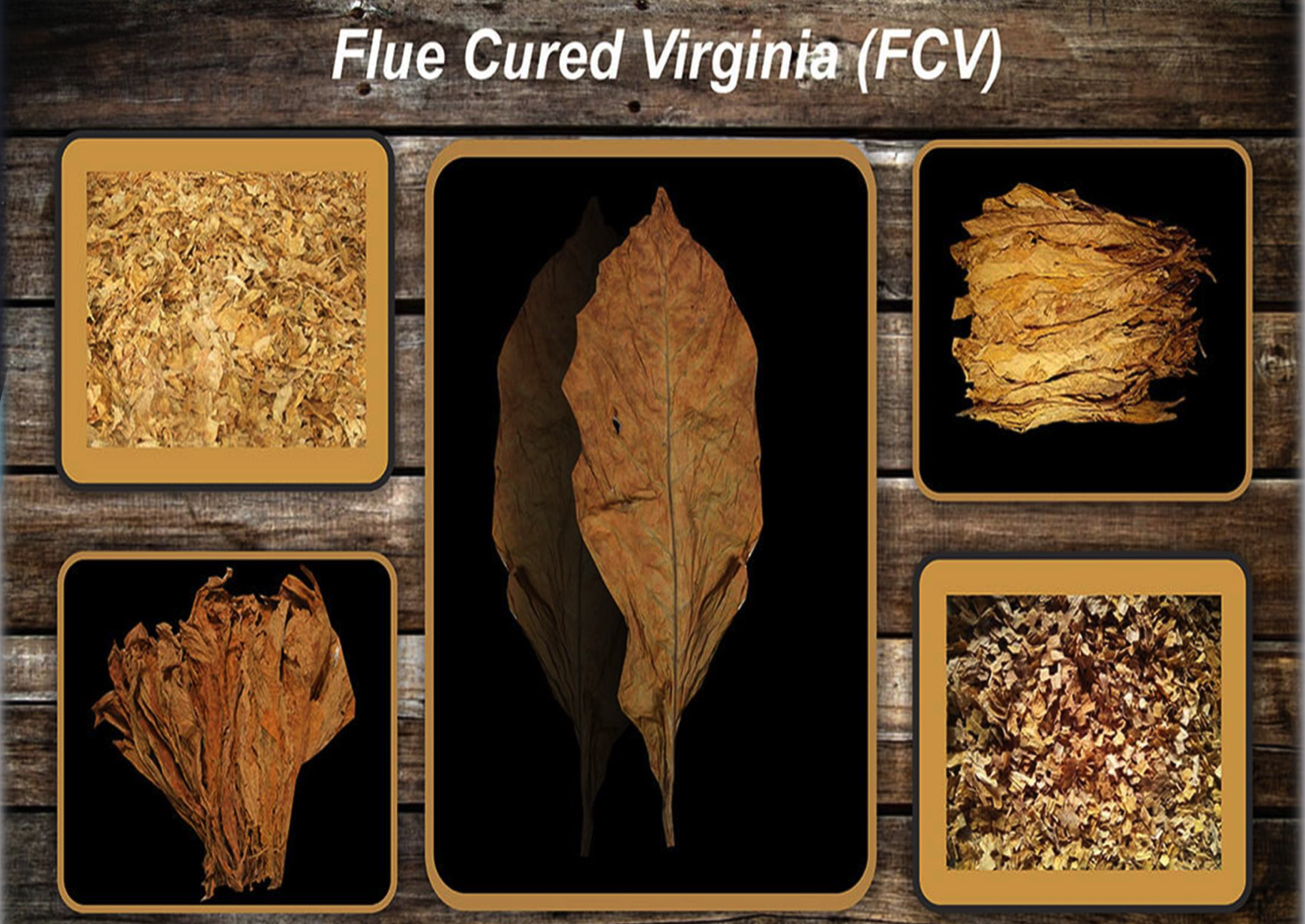
- 27 Feb 2024
Why is it in the News?
The Central Government has approved a 10 thousand rupees interest-free Loan to the Flue Cured Virginia (FCV) Tobacco growers in Andhra Pradesh.
What is Flue Cured Tobacco?
- There are three types of tobacco curing methods traditionally used: Air-Cured, Fire-Cured, and Flue-Cured.
- Each of the different curing methods results in a tobacco product that is distinguishable by both its nicotine content and its aroma.
Flue-Cured:
- Flue-curing tobacco is raised with a low level of nitrogen and harvested by priming method.
- Harvested leaves are strung on sticks which are then stacked into to flue curing barn.
- The barn is artificially heated.
- Green leaves should be loaded in the upper half of the barn and the lighter ones in the lower half.
- The three steps are Yellowing, Fixing the color, and Drying.
Grading:
- After curing, leaves are graded by sorting leaves into uniform lots according to body, color, and degree of blemish or damage.
- The most important elements of quality in FCV tobacco are color, texture, size, blemish, strength, even burning with white ash, and agreeable flavor.
Why is Tobacco Cured?
- To create smoking tobacco, the tobacco leaves need to be cured, or dried out.
- The wet, green tobacco leaves of a tobacco plant initially contain too much moisture to catch fire.
- They also have a higher chlorophyll content.
- By releasing a certain amount of chlorophyll from the leaves during the drying-out process, the natural tannins come out giving the smoked tobacco its flavor and scent.
- The curing process makes the leaf dry enough to smoke while increasing the sugar and natural tannins found in each leaf to create the sweetly aromatic and mild taste tobacco is known for.
Key Characteristics of Flue-cured Tobacco:
-
- Produces primarily cigarette tobacco
- Contains a high sugar content
- Contains medium to high levels of nicotine
- Rich in natural tannins which creates its distinct mild and slightly sweet flavor and aroma
- FCV tobacco is mainly produced in Andhra Pradesh and Karnataka in India.
India gets desi Garbhini GA2 for evaluation of foetal growth
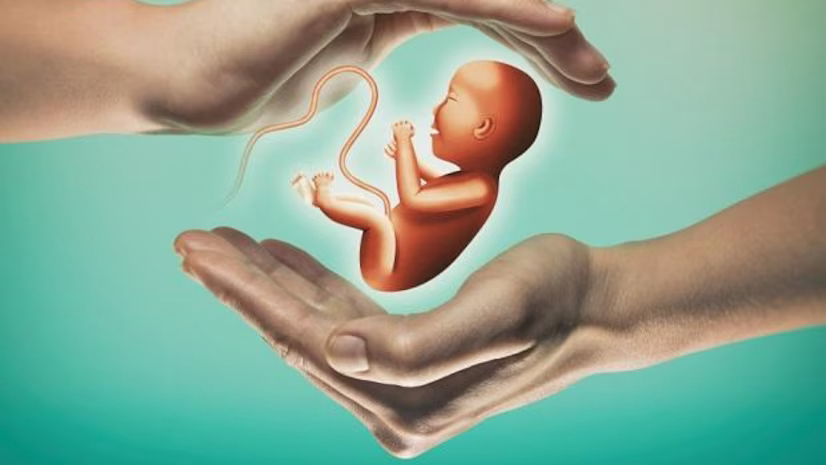
- 27 Feb 2024
Why is it in the News?
Specifically tailored to address the unique characteristics of foetal growth within the Indian population, India has finally got its locally made ‘Garbhini-GA2’, a groundbreaking Artificial Intelligence model.
What is Garbhini-GA2?
- The Garbhini-GA2 model, developed as part of the DBT India initiative (GARBH-Ini) program by researchers at the Indian Institute of Technology (IIT) Madras and the Translational Health Science and Technology Institute (THSTI), Faridabad, addresses the challenge of accurately estimating foetal age (gestational age, GA) in the Indian population, particularly in the second and third trimesters.
- Unlike existing formulas designed for Western populations, Garbhini-GA2 accounts for variations in foetal growth specific to the Indian context, significantly reducing estimation errors by nearly threefold.
- This innovative model is crucial for ensuring precise prenatal care and determining accurate delivery dates, thereby enhancing maternal and foetal health outcomes.
- Garbhini-GA2 marks a milestone as the first late-trimester GA estimation model validated using Indian population data, offering a tailored approach to foetal age determination that is essential for effective maternal healthcare."
About Translational Health Science and Technology Institute (THSTI):
- THSTI, an autonomous institute under the Ministry of Science and Technology, was founded in 2009 in Faridabad, Haryana, with a core commitment to advancing research beyond mere discovery.
- By fostering collaboration among diverse teams in medicine, science, and technology, THSTI leverages translational expertise to drive clinical research and innovation.
- In addition to its core mission, THSTI plays a pivotal role in fostering social innovation and entrepreneurial endeavors, particularly in the domain of maternal and child healthcare.
. First-of-its-kind Micro Turbojet Engine made in India
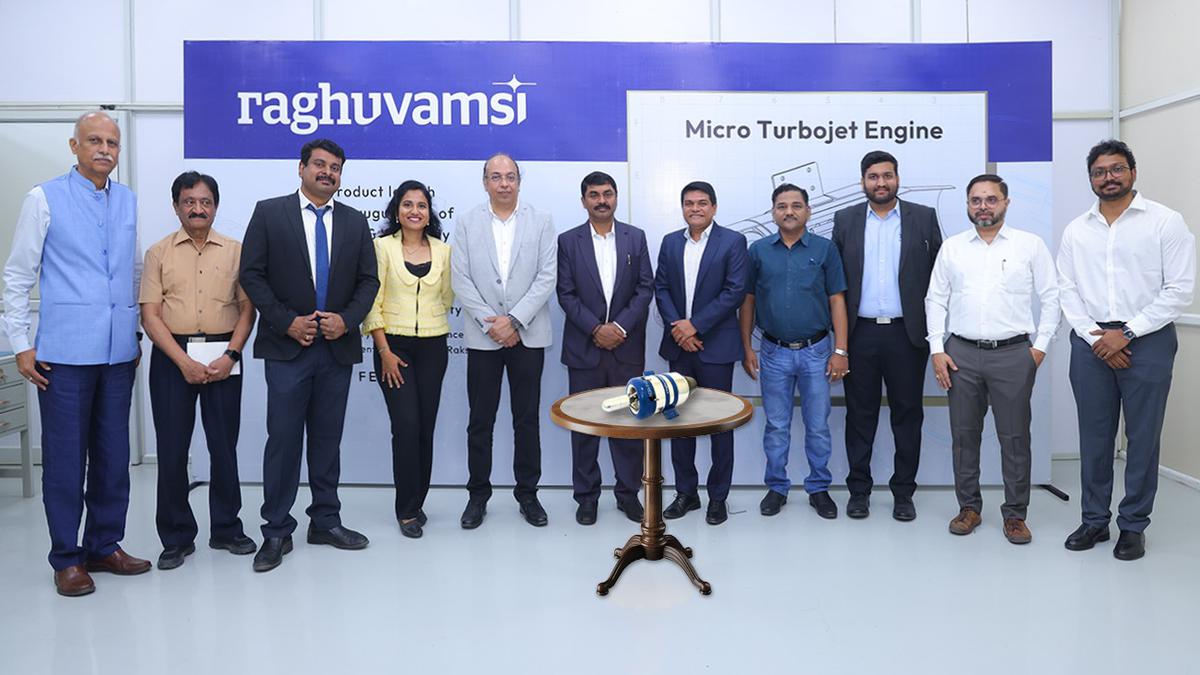
- 27 Feb 2024
Why is it in the News?
A micro turbojet engine designed and developed indigenously by Hyderabad-based firm Raghu Vamsi Machine Tools with the support of the IIT Hyderabad has been unveiled.
Key Highlights of the Micro Turbojet Engine “INDRA RV25: 240N”:
- It is an indigenous micro turbojet engine made in India.
- Its primary focus is on serving unmanned aerial vehicles (UAVs) or drones.
- Beyond UAVs, the engine exhibits versatile applications in air taxis, jetpacks, auxiliary power units, range extenders, and potential use in power generation for the future.
- Indigenous design and development: Engineered entirely in India by the Raghu Vamsi Machine Tools (RVMT) team of skilled engineers & supported by IIT, Hyderabad.
- A great demonstration of the potential of Industry-Academia partnership
- Self-reliance and autonomy: By reducing reliance on imported technologies, components, and expertise, the Micro Turbojet Engine contributes to India’s goal of achieving self-sufficiency in critical sectors, bolstering national security and economic resilience
- Empowering local manufacturing: The launch of the indigenous Micro Turbojet Engine not only drives technological innovation but also stimulates the growth of the domestic aerospace and defense manufacturing ecosystem, creating jobs and fostering economic growth.
What Is a Turbojet Engine and How Does It Work?
- Turbojet engines are jet engines that, like other jet engines, generate propulsion by discharging or expelling heated air.
- They feature a combustion chamber in which they burn fuel and air.
- As they burn this mixture, turbojet engines will discharge heated air.
- It can find turbojet engines in commercial airplanes, civilian airplanes, and military aircraft.
How Turbojet Engines Work?
- The process begins by drawing air through an intake.
- Turbojet engines feature an air intake, which is typically located near the front of the engine.
- Air will flow into this intake, at which point it will be redirected to the engine’s interior.
- After entering the engine, the air will become compressed.
- Turbojet engines feature a set of rotating blades. Known as compressors, these rotating blades are designed to compress the air.
- The next step in the process is combustion which involves the burning of fuel and air.
- Turbojet engines will inject fuel into the same combustion chamber where the compressed air is located.
- A spark will then ignite the mixture of fuel and compressed air, thereby generating hot, high-pressure exhaust gas.
- The exhaust gas generated by the combustion is expelled out the rear of the turbojet engine.
- This rearward expulsion allows for forward propulsion.
- As the exhaust gas is discharged out the rear of the turbojet engine, the airplane will be propelled forward.
IGNCA’s ‘language atlas’ to shine a light on India’s linguistic diversity
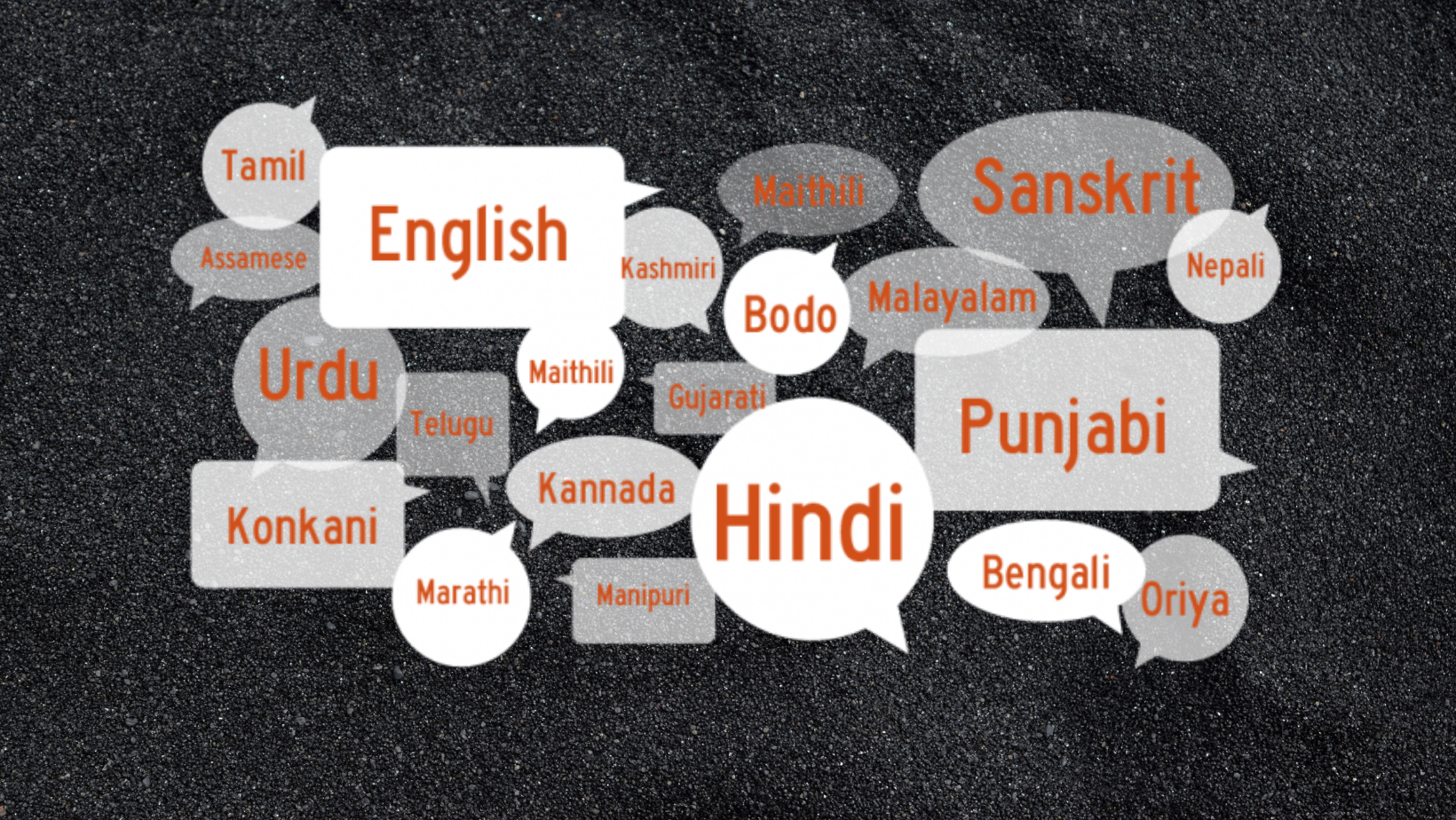
- 26 Feb 2024
Why is it in the News?
The Indira Gandhi National Centre for Arts, an autonomous body under the Union Culture Ministry, proposes to conduct a linguistic survey across the country to create a ‘Language Atlas’ of India.
About the Language Atlas of India:
- The Language Atlas of India traces its roots back to the seminal Linguistic Survey of India (LSI) conducted by Sir George Abraham Grierson, which was first published in 1928.
- Since its inception, the linguistic landscape of India has undergone significant transformations, necessitating a comprehensive reevaluation.
- The proposed linguistic survey aims to capture the myriad languages and dialects prevalent across the country, acknowledging the dynamic nature of linguistic diversity.
- It seeks to document not only the languages and dialects actively spoken but also those that have faced extinction or are teetering on the brink of disappearance.
- Engaging a wide array of stakeholders, including the Ministries of Culture, Education, Tribal Affairs, Home, Social Justice and Empowerment, and Development of the North East Region, the survey endeavours to be inclusive and representative of diverse language communities.
- Phased Approach: The Detailed Project Report (DPR) advocates for a structured approach, commencing with state-wise data collection followed by regional assessments.
- Furthermore, the proposal advocates for the preservation of linguistic heritage through the digital archiving of audio recordings encompassing the linguistic richness of the nation.
- Significance: Languages serve as conduits of communication and repositories of cultural heritage, encapsulating local wisdom, traditions, narratives, and medicinal knowledge.
- For instance, many indigenous communities possess indigenous knowledge of medicinal plants and herbs, which are transmitted through generations via their native languages, emphasizing the intrinsic link between language and cultural preservation.
About the Indira Gandhi National Centre for the Arts (IGNCA):
- Established in 1987 as an autonomous institution under the aegis of the Ministry of Culture, the Indira Gandhi National Centre for the Arts (IGNCA) serves as a pivotal hub for research, academic endeavours, and dissemination within the realm of the arts.
- Governance Structure: Operating with a Board of Trustees, the IGNCA convenes regularly to provide overarching guidance and direction for its multifaceted activities.
- Under the stewardship of a Chairman, the Executive Committee, composed of select Trustees, oversees the operational facets of the centre.
- Integral Role in Project Mausam: Embracing its role as a research unit, the IGNCA actively contributes to Project Mausam, a collaborative initiative spearheaded by the Ministry of Culture in partnership with the Archaeological Survey of India (ASI), New Delhi.
- Project Mausam endeavours to explore the intricate tapestry of cultural routes and maritime landscapes that historically linked diverse regions along the Indian Ocean littoral, fostering connections between coastal centres and their hinterlands.
- Engagement in the Vedic Heritage Portal: In alignment with its commitment to cultural heritage preservation, the IGNCA embarks on a project dedicated to designing and developing a Vedic Heritage Portal, under the auspices of the Ministry of Culture, Government of India.
- This portal serves as a digital platform aimed at elucidating the profound messages encapsulated within the Vedas, contributing to the dissemination of ancient wisdom and knowledge.
G-33 calls for progress on agricultural trade ahead of WTO Ministerial Conference
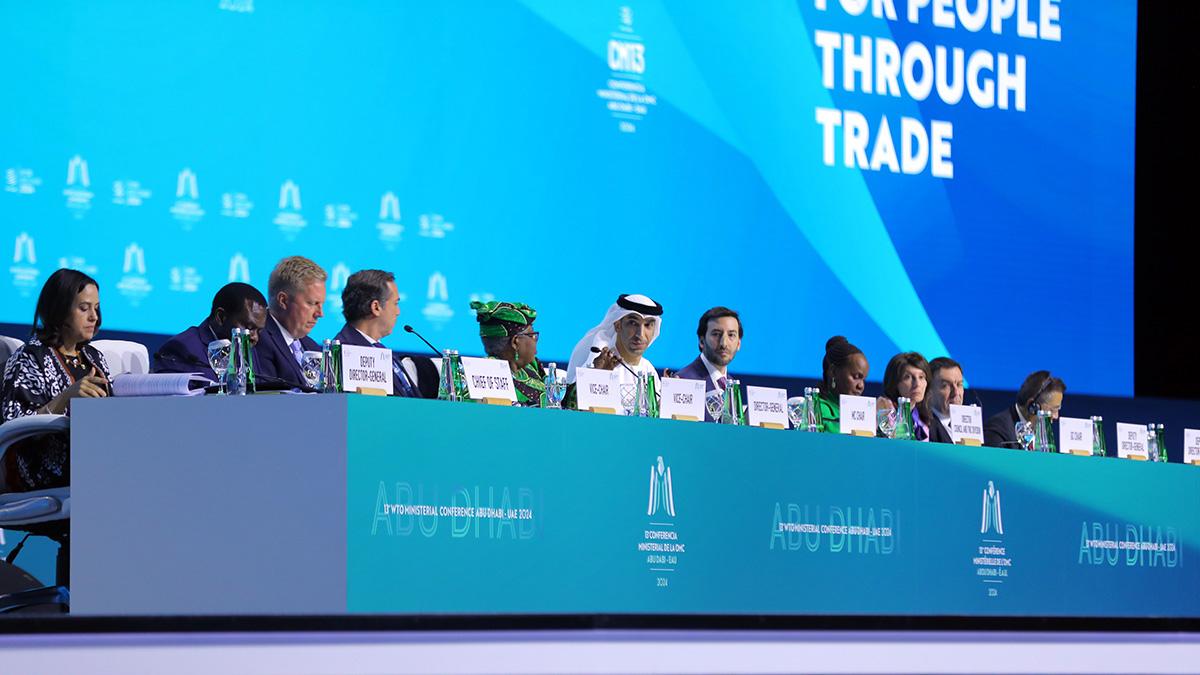
- 26 Feb 2024
Why is it in the News?
The G-33 group of countries recently expressed serious concern over the lack of progress in agriculture trade negotiations and urged the members of the World Trade Organisation (WTO) to work on a permanent solution to the issue of public stockholding of grains for food security purposes.
Key Highlights of the G33 Trade Ministers Meeting in Abu Dhabi:
- Special Safeguard Mechanism: The G33 group emphasized the importance of the Special Safeguard Mechanism (SSM) as a crucial instrument against significant import surges or sudden price declines.
- They called for WTO members to reach an agreement and adopt a decision on SSM by the 14th WTO Ministerial Conference (MC).
- Permanent Solution for Public Stockholding: The G33 nations sought a permanent solution during the 13th Ministerial Conference, which commenced in Abu Dhabi recently.
- The MC serves as the highest decision-making body of the WTO.
- Critical Importance of Public Stockholding: The G33 statement highlighted the critical significance of public stockholding for food security in developing countries.
- It enables governments to procure crops from farmers at the minimum support price (MSP) and store and distribute food grains to the poor.
- This program supports low-income or resource-poor producers and contributes to rural development.
- The 13th WTO Ministerial Conference provides a crucial platform for WTO members to engage in constructive discussions and work towards finding mutually beneficial solutions.
What is G 33?
- The G33 is a forum of developing countries including India, Brazil, South Africa etc. formed during the Cancun ministerial conference of the WTO (2003), to protect the interest of the developing countries in agricultural trade negotiations.
- It was created to help group countries which were all facing similar problems.
- The G33 has proposed special rules for developing countries at WTO negotiations, like allowing them to continue to restrict access to their agricultural markets.
- Dominated by India, the group has "defensive" concerns regarding agriculture in relation to World Trade Organization negotiations, and seeks to limit the degree of market opening required of developing countries.
- The group has advocated the creation of a "special products" exemption, which would allow developing countries to exempt certain products from tariff exemptions, and also a "special safeguard mechanism" which would permit tariff increases in response to import surges.
Analysis of Household Consumption Expenditure Survey 2022-23 Report

- 26 Feb 2024
Why is it in the News?
The per capita monthly household expenditure more than doubled in 2022-23 as compared to 2011-12, according to the latest study by the National Sample Survey Office (NSSO).
Context:
- As per the 2022-23 report, rising inequality between the top and bottom of the pyramid.
- Urban and rural households register higher expenditure, spending less on food items.
- New methodology and questionnaire used in Household Consumption Expenditure Survey (HCES) 2022-23.
About the National Sample Survey Office (NSSO):
- The National Sample Survey Office (NSSO) comes under the Ministry of Statistics and Program Implementation headed by a Director General.
- It is responsible for the conduct of large-scale sample surveys in diverse fields on an All-India basis.
- Primarily data are collected through nationwide household surveys on various socio-economic subjects, Annual Survey of Industries (ASI), etc.
- Besides these surveys, NSSO collects data on rural and urban prices and plays a significant role in the improvement of crop statistics through supervision of the area enumeration and crop estimation surveys of the State agencies.
- It also maintains a frame of urban area units for use in sample surveys in urban areas.
The NSSO has four Divisions:
- Survey Design and Research Division (SDRD): This Division, located at Kolkata, is responsible for the technical planning of surveys, formulation of concepts and definitions, sampling design, designing of inquiry schedules, drawing up of tabulation plans, and analysis and presentation of survey results.
- Field Operations Division (FOD): The Division, with its headquarters at Delhi/Faridabad, is responsible for the collection of primary data for the surveys undertaken by NSS.
- Data Processing Division (DPD): The Division, with its headquarters at Kolkata is responsible for sample selection, software development, processing, validation and tabulation of the data collected through surveys.
- Survey Coordination Division (SCD): This Division, located in New Delhi, coordinates all the activities of different Divisions of NSS.
- It also brings out the bi-annual journal of NSS, titled “Sarvekshana”, and organizes National Seminars on the results of various Socio-economic surveys undertaken by NSS.
Key Insights From the 2022-23 Survey:
- Evolution of Food Expenditure: Over the past two decades, there has been a notable shift in spending patterns on food in India.
- Between 1999-2000 and 2022-23, both urban and rural households witnessed a gradual decline in the share of expenditure allocated to food.
- This period marks the first instance where food expenditure has dropped to below 50% in rural India and below 40% in urban India.
- Changing Dietary Preferences: The composition of food consumption has also undergone significant changes.
- Cereals and pulses have seen a reduction in their share of overall food consumption expenditure, while spending on milk has surged, surpassing that on cereals and pulses combined.
- In a noteworthy shift, the average Indian now spends more on fruits and vegetables than on food grains.
- Furthermore, expenditure on animal proteins like eggs, fish, and meat has shown a growing trend, indicating a preference for animal-based proteins over plant-based ones.
- Rise in Processed Food Consumption: There has been an observed increase in the share of expenditure allocated to processed foods, beverages, and purchased cooked meals.
- This trend aligns with the Engel Curve hypothesis, suggesting that as incomes rise, households allocate a smaller proportion of their spending to food and tend to prefer superior items over inferior ones.
- Closing Rural-Urban Consumption Gap: Consumption growth in rural areas has outpaced that in urban areas, leading to a narrowing of the rural-urban consumption divide.
- If this trend continues, it could potentially lead to parity in urban and rural incomes and consumption patterns in the future.
- Challenges in Inflation Calculation: The findings of the latest Household Consumption Expenditure (HCE) Survey underscore the need to review the inflation basket.
- The current Consumer Price Index (CPI)-based inflation calculation, established in 2012, may not accurately reflect contemporary consumption patterns.
- For instance, the disparity between the weightage assigned to cereals in the CPI basket and actual expenditure on cereals by rural households highlights the need for recalibration.
- Insights on Poverty Reduction: According to NITI Aayog CEO B V R Subrahmanyam, the latest survey indicates a reduction in poverty to five per cent nationwide.
- Both rural and urban areas are witnessing increased prosperity, as evidenced by rising per capita monthly expenditure.
- Demand for Legal Guarantee to MSP: While there is a demand for a legal guarantee to Minimum Support Price (MSP) for 23 crops, including food grains and sugarcane, the survey data suggests that the growth in the farm sector is being primarily driven by livestock, fisheries, and horticulture crops.
- This poses a pertinent question regarding the promotion of production: should the focus be on crops outside the MSP purview, such as milk, fish, poultry products, fruits, and vegetables, given their growing consumption trends?
BharatGPT Unveils Hanooman, a New Suite of Indic Generative AI Models
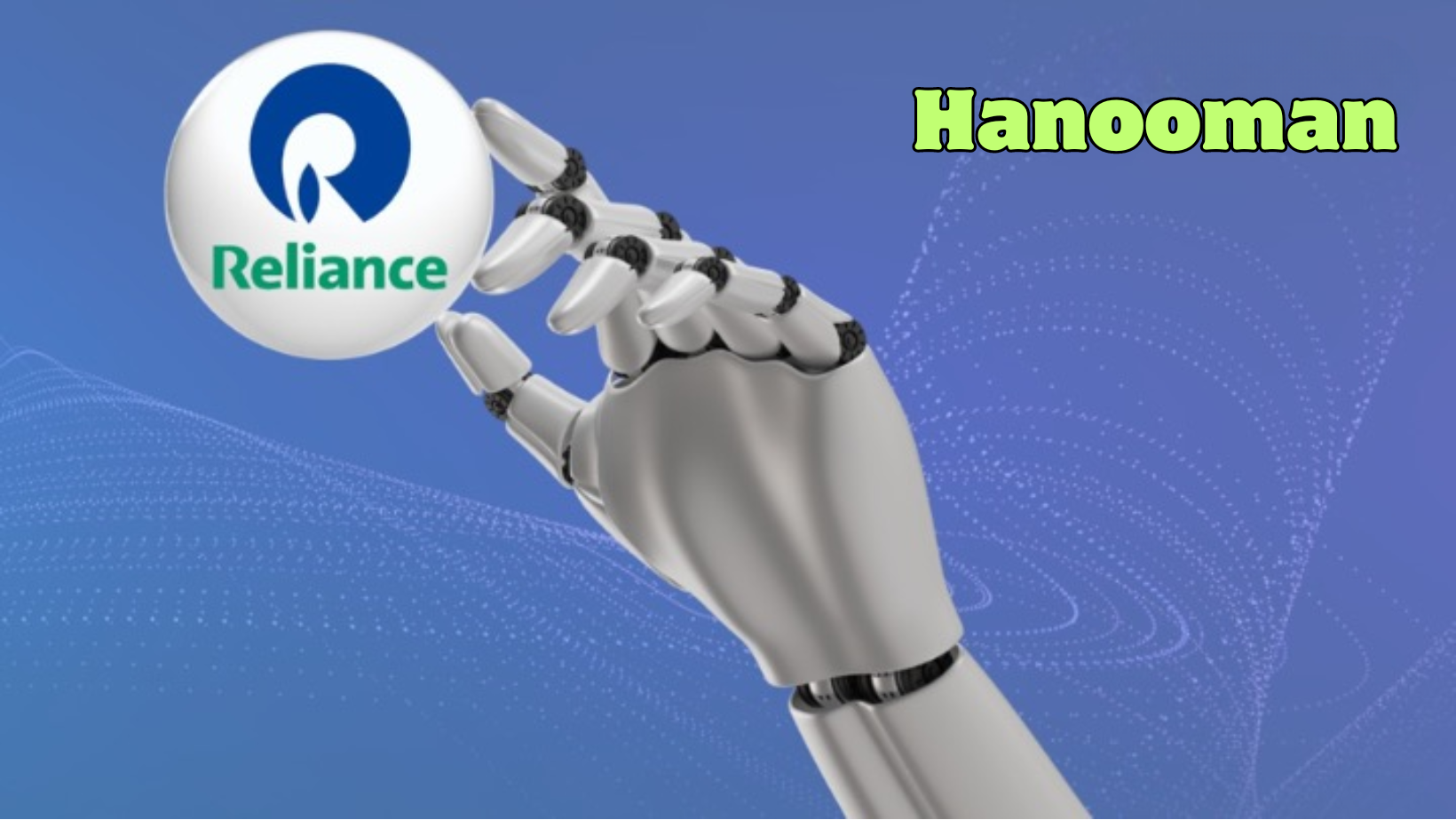
- 24 Feb 2024
Why is it in the News?
Recently, the BharatGPT group, led by IIT Bombay along with seven other elite Indian engineering institutes announced that it would launch its first ChatGPT-like service next month.
What is Hanooman?
- Hanooman is a series of large language models (LLMs) that can respond in 11 Indian languages like Hindi, Tamil, and Marathi, with plans to expand to more than 20 languages.
- It is unveiled by Seetha Mahalaxmi Healthcare (SML) in partnership with the IIT Bombay-led BharatGPT ecosystem.
- The BharatGPT group, which is backed by Reliance Industries.
- Hanooman has been designed to work in four fields, including health care, governance, financial services, and education.
- According to BharatGPT, the series isn’t just a chatbot but It is a multimodal AI tool, which can generate text, speech, videos and more in multiple Indian languages.
- One of the first customised versions is VizzhyGPT, an AI model fine-tuned for healthcare using reams of medical data.
- The size of these AI models ranges from 1.5 billion to a whopping 40 billion parameters.
Are There Any Other Indian Language Models?
- Apart from BharatGPT, a host of different startups like Sarvam and Krutrim, backed by prominent VC investors such as Lightspeed Venture Partners and billionaire Vinod Khosla’s fund, are also building AI models customised for India
What are Large Language Models (LLMs)?
- Large language models use deep learning techniques to process large amounts of text.
- They work by processing vast amounts of text, understanding the structure and meaning, and learning from it.
- LLMs are ‘trained’ to identify meanings and relationships between words.
- The greater the amount of training data a model is fed, the smarter it gets at understanding and producing text.
- The training data is usually large datasets, such as Wikipedia, OpenWebText, and the Common Crawl Corpus.
- These contain large amounts of text data, which the models use to understand and generate natural language.
PM Modi unveils of Sant Ravidas statue in Varanasi on 647th birth anniversary
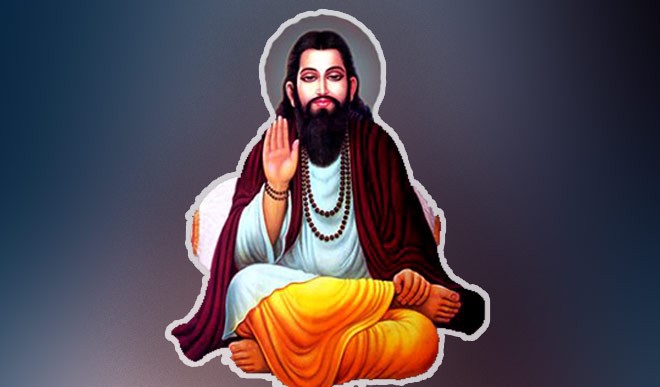
- 24 Feb 2024
Why is it in the News?
Prime Minister Narendra Modi recently said that the present government is taking forward the teachings and ideals of Sant Ravidas while following the mantra of ‘Sabka Saath Sabka Vikas, Sabka Vishwas aur Sabka Prayas’.
Who is Guru Ravidas?
- Guru Ravidass (also Ravidas, Rohidas and Ruhidas in eastern India) was a North Indian Guru mystic of the bhakti movement who was active in the 15th century CE.
- Venerated in the region of Uttar Pradesh as well as the Indian state of Maharashtra, his devotional songs and verses made a lasting impact upon the bhakti movement.
- He is often given the honorific Guru.
- He was a socio-religious reformer, a thinker, a theosophist, a humanist, a poet, a traveller, a pacifist and a spiritual figure before whom even head-priests of Benaras lay prostrate to pay homage.
- His birthday comes every year at Puran Mashi in the month of Magh.
- His mother’s name was Mata Kalsi and his father’s name was Baba Santokh Dass.
- Guru Ravidass was born into a humble family which was considered untouchable as per the social order prevailing at that time in Hindu society.
- He spearheaded the fight against man-made discrimination based on caste, colour or creed and preached the lofty ideas of socialism, secularism, equality and fraternity.
- He taught the lessons of universal brotherhood, tolerance, and the message of loving your neighbour, which got more importance in today’s world.
- Guru Ravidass fulfilled Guru Nanak Dev’s request by donating old manuscripts, which contained a collection of Guru Ravidass’s verses and poems.
- The earliest collection of these poems is available in Sri Guru Granth Sahib.
- It was compiled by Guru Arjan Dev, the fifth Guru of the Sikhs.
- There are 41 verses of Guru Ravidass in the Sikh Holy Book, Guru Granth Sahib.
- Meera Bai, a revered figure in Hindu spiritualism, is said to have considered Guru Ravidas as her spiritual Guru.
- It is said that Guru Ravidass disappeared from the world, leaving behind only his footprints.
- Some believe that Guru Ravidass lived in Banaras during his last days, dying a natural death at the age of 126 years.
Govt amends electricity rules to speed up new connections, promote EVs and solar PV systems
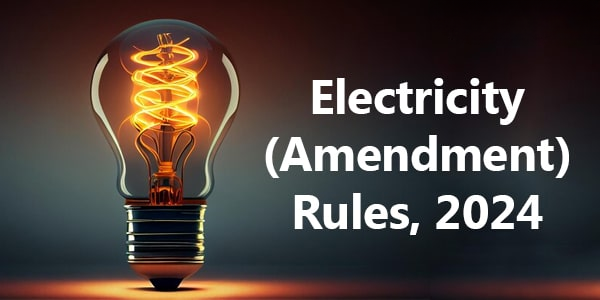
- 24 Feb 2024
Why is it in the News?
Recently, the government amended the Electricity (Rights of Consumers) Rules 2020, allowing consumers to now obtain separate electricity connections for charging their electric vehicles, and reducing the time period for obtaining a new electricity connection.
Context:
- The Government of India has recently approved the amendments to the Electricity (Rights of Consumers) Rules, 2020.
- According to the Union Minister for Power and New & Renewable Energy, Shri R. K. Singh, these amendments aim to expedite the process of obtaining new electricity connections.
- Encompassing various facets including billing, grievance redressal, compensation, and timeframes for new connections, these rules are designed to streamline consumer experiences.
- Moreover, they extend support to prosumers engaged in renewable energy generation.
- The amendments, as highlighted by the Minister, are poised to enhance consumer empowerment, fostering a more consumer-centric electricity ecosystem.
Major Amendments to the Electricity (Rights of Consumers) Rules, 2020:
- Streamlining Rooftop Solar Installation: Amendments exempt the requirement for technical feasibility studies for rooftop solar systems up to 10 kW capacity.
- For systems exceeding 10 kW, the timeframe for feasibility studies has been condensed from twenty to fifteen days, with automatic approval if deadlines are missed.
- Commissioning timelines for distribution licensees have been shortened from thirty to fifteen days.
- Dedicated Connections for Electric Vehicle Charging: Consumers can now secure separate electricity connections for charging Electric Vehicles (EVs), aligning with national emission reduction targets and Net Zero aspirations by 2070.
- Accelerated Connection Processes: New electricity connection timelines have been slashed from seven to three days in metropolitan areas, from fifteen to seven days in other municipal areas, and from thirty to fifteen days in rural regions.
- Exceptions apply in rural hilly terrains, maintaining the existing thirty-day period.
- Enhanced Consumer Rights in Residential Complexes: Residents in cooperative housing societies and residential colonies gain the option of individual or single-point connections, decided through transparent ballots conducted by Distribution Companies.
- Tariff parity is ensured between single-point and individual connections.
- Prompt Meter Installation for Complaints: Distribution licensees are mandated to install additional metres within five days of receiving complaints to verify consumption for a minimum of three months, enhancing consumer confidence and billing accuracy.
First moon-landing by private company

- 24 Feb 2024
Why is it in the News?
Fifty-two years after the last successful Apollo mission, a US-made spacecraft landed on the Moon recently which also marks the arrival of private space companies on the lunar surface.
What is Odysseus Lunar Exploration?
- Odysseus is a spacecraft built by Intuitive Machines, embarked on its journey from Earth aboard a Falcon 9 rocket by SpaceX recently.
- Intuitive Machines, headquartered in Houston, USA, boasts a decade-long legacy in space exploration endeavours.
- Loaded with six NASA payloads, Odysseus set its course for the Moon.
- Its lander module, Nova-C, achieved the milestone of landing in the Moon's south pole region, following Chandrayaan-3's similar feat last year.
- This marks the third successful moon-landing event in under a year, alongside Chandrayaan-3 and Japan's SLIM (Smart Lander for Investigating Moon).
Mission Objectives:
- The primary aim of the lunar lander is to assess the environmental conditions at the Moon's south pole.
- This assessment holds significant importance as NASA gears up for a crewed mission in September 2026 with Artemis III.
- Before sending astronauts to this area, NASA seeks to gather crucial data, including insights into water presence and accessibility, to inform mission planning.
Funding:
- Under the Commercial Lunar Payload Services (CLPS) program, NASA allocated $118 million to Intuitive Machines for this mission.
- CLPS has engaged at least 14 private companies to ferry NASA payloads to the Moon, fostering a collaborative environment aimed at nurturing the private space industry's capabilities in lunar exploration technology and science.
The Significance of Odysseus:
- Advancing Long-Term Lunar Presence: Odysseus' successful landing heralds a transformative phase in lunar exploration, aiming to establish infrastructure and a technological ecosystem capable of sustaining extended human presence.
- Diverging from Past Lunar Missions: In contrast to the moon landings of the 1960s and 1970s spearheaded by the US and the Soviet Union, Odysseus' mission focuses on leveraging lunar resources for sustained exploration.
- While historic moon landings were remarkable feats, technological limitations of the time hindered the immediate utilisation of lunar resources such as mining.
- Supporting US Commitment to Moon Exploration via Artemis Program: Odysseus' touchdown aligns with the US commitment to rekindle lunar exploration through the ambitious Artemis program.
- This endeavour transcends mere lunar landing missions, aiming to establish essential infrastructure and a thriving lunar economy conducive to comprehensive exploration.
- Unlocking Lunar Potential as a Gateway to Deep Space: By laying the groundwork for lunar infrastructure and economic activity, missions like Odysseus pave the way for leveraging the Moon as a springboard for deeper space exploration, offering nations unprecedented opportunities for cosmic discovery.
Kiru Hydropower Corruption Case: CBI Searches J&K Ex-Governor Satya Pal Malik’s Premises
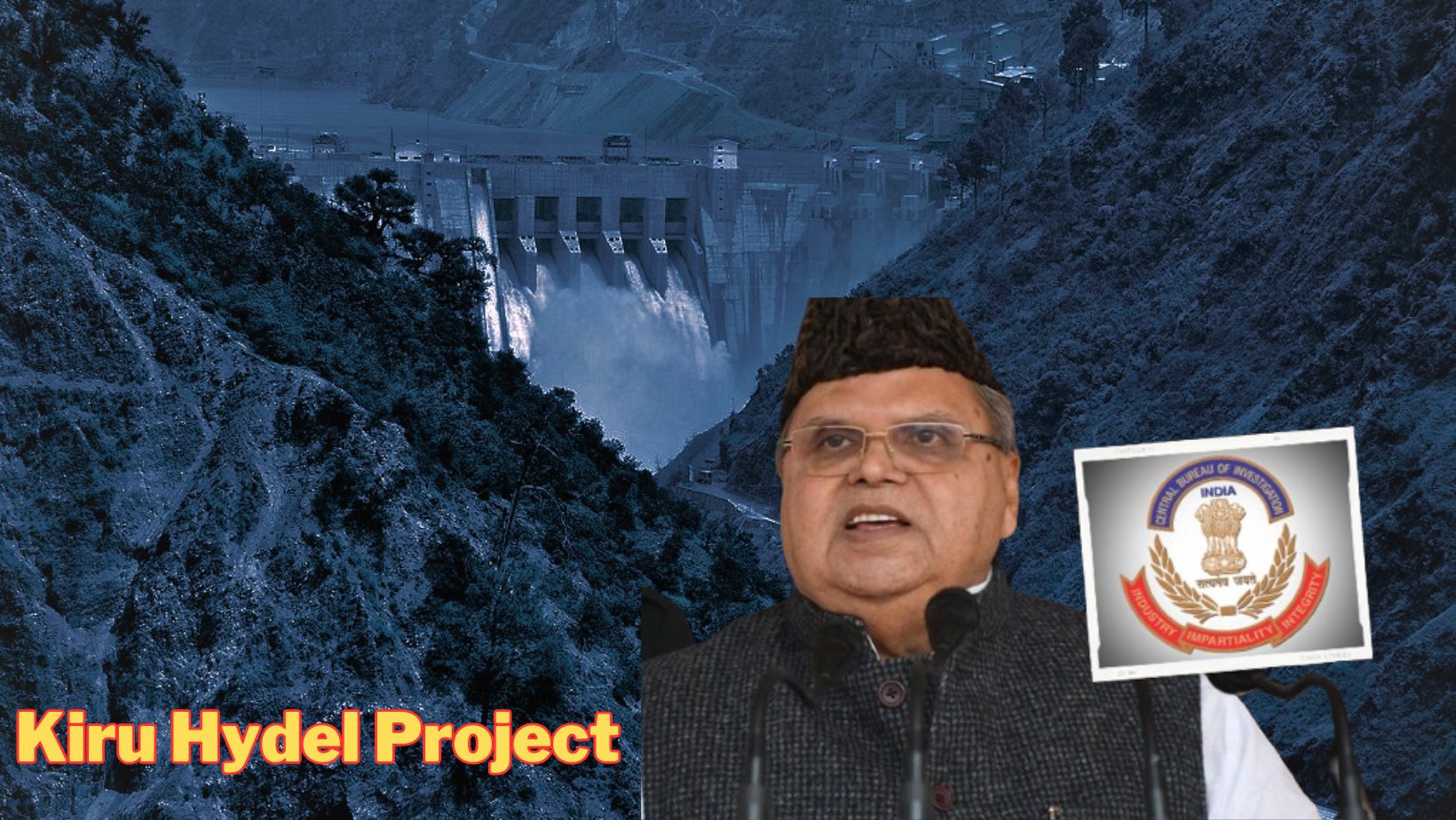
- 23 Feb 2024
Why is it in the News?
The CBI conducted searches at the premises of former Jammu and Kashmir governor Satya Pal Malik and 29 other locations recently in connection with alleged corruption in the Rs 2,200-crore Kiru Hydropower project.
What are the Corruption Allegations Surrounding the Kiru Hydel Project?
- During his tenure as the governor of Jammu and Kashmir from August 23, 2018, to October 30, 2019, Satya Pal Malik claimed that he was offered a Rs 300-crore bribe to approve two files, one of which pertained to the project.
- In 2022, the J&K government requested a CBI investigation into alleged misconduct, previously highlighted by Satya Pal Malik, in the awarding of two government contracts.
- Concerns have been raised regarding the award of civil works, particularly to Patel Engineering Ltd, a prominent infrastructure and construction company established in 1949.
- The CBI has initiated action against the former CVPPPL chairman, MD, and Directors, as well as Patel Engineering.
- According to the FIR, an inquiry by the J&K Anti-Corruption Bureau and the Power Department had been conducted.
- The FIR alleges non-compliance with e-tendering guidelines in the awarding of civil works for the project.
- Additionally, accusations of substandard work and failure to employ local youth have been levelled against the hydel project.
What is the Kiru Hydel Power Project?
- The 624MW Kiru hydroelectric project is being developed as a run-of-river scheme in the Kishtwar district of Jammu and Kashmir, a union territory in India.
- Location of the Kiru project: The Kiru hydropower project is being built along the Chenab River near the villages of Patharnakki and Kiru, approximately 42 km from Kishtwar.
- It will be located between the Kirthai II hydroelectric project to its upstream and the Kwar hydroelectric project to its downstream.
- The project is being developed by the Chenab Valley Power Projects (CVPPPL) joint venture (JV) between:
- National Hydroelectric Power (NHPC, 49%)
- Jammu & Kashmir State Power Development (JKSPDC, 49%) and
- The Power Trading Corporation (PTC, 2%)
- The Ministry of Environment Forests and Climate Change (MoEF&CC) awarded environmental clearance for the hydroelectric project in 2016 while the foundation stone was laid in February 2019.
- The project is being constructed at an estimated cost of Rs 4,287 crore and is expected to start commercial operations in July 2025.
- The Cabinet Committee on Economic Affairs (CCEA) approved the investment in the project in March 2019.
- Apart from helping address the energy demand across northern India and the state’s rural areas, it could aid small-scale and cottage industries.
Advantages of the Kiru Hydroelectric Power Project:
- This project aims to alleviate the energy shortage in Northern India while also enhancing the transportation, education, healthcare, and road infrastructure in the area.
- By bringing electricity to rural communities, the project will lessen the reliance of residents on alternative energy sources.
- The heightened power availability will foster the growth of small-scale and cottage industries, generating employment opportunities and revenue for the local populace.
What is a Run-of-river Project?
- Run-of-river hydropower is a facility that channels flowing water from a river through a canal or penstock to spin a turbine.
- Typically a run-of-river project will have little or no storage facility.
- Run-of-river provides a continuous supply of electricity (base load), with some flexibility of operation for daily fluctuations in demand through water flow that is regulated by the facility.
Race to the global eradication of Guinea worm disease nears the finish line
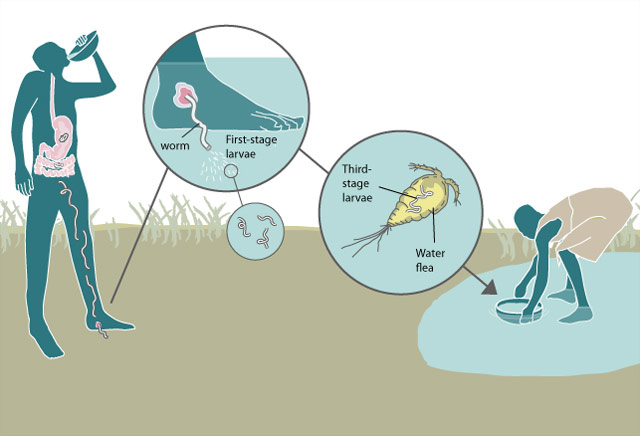
- 23 Feb 2024
Why is it in the News?
The world is on the brink of a public health triumph as it closes in on eradicating Guinea worm disease. There were more than 3.5 million cases of this disease in the 1980s, but according to the WHO, they dwindled to 14 cases in 2021, 13 in 2022, and just six in 2023.
What is Guinea Worm Disease?
- Dracunculiasis is also called guinea worm disease (GWD).
- It is an infection caused by a parasite called Dracunculus medinensis (guinea worm).
- This parasite is an organism that survives by deriving nutrients and feeding off another organism.
- GWD spreads through drinking contaminated water.
- It is presently eradicated in most parts of the world but is still seen in remote parts of Africa and some remote rural areas in the world where there is no access to clean drinking water.
- GWD is considered endemic in three African countries, Sudan, Ethiopia, and Mali.
- In recent years, a few cases of GWD in animals, especially dogs, have been reported in developed countries as well.
- GWD is a serious condition, that causes debilitating pain and complications, affecting the quality of life
Symptoms:
- People infected with Guinea worm don’t typically have any symptoms until about a year after they're first infected.
- It’s not until the worm is about to erupt from the skin that people start to feel sick.
- What that happens, the symptoms of Guinea worm disease can include Fever, Nausea and vomiting, Diarrhoea, Shortness of breath, Burning, itching, pain, and swelling where the worm is in the body (often the legs and feet) and Blister where the worm breaks through the skin.
Impact:
- Guinea worm disease isn’t often deadly, but it can cause serious complications, lifelong disabilities, and financial hardship for those involved.
- The pain involved is often so intense that it’s difficult for people to work, go to school, or care for themselves or others.
- This lasts an average of 8.5 weeks, though lifelong disability is common.
Dracunculiasis Treatment:
- There is no vaccine or drug developed to prevent or treat this disease.
- The only means available is the management of the disease which is removing the whole worm and caring for the wound caused by it and avoiding infection in the process or exposure to the guinea worm larvae at all costs, especially by avoiding contaminated drinking water and stagnant water sources.
- Without proper treatment, wounds caused by the worm can become infected by bacteria, leading to sepsis, septic arthritis, and contractures (when joints lock and deform).
- In some cases, these infections become life-threatening.
Earth’s early evolution: Fresh insights from rocks formed 3.5 billion years ago
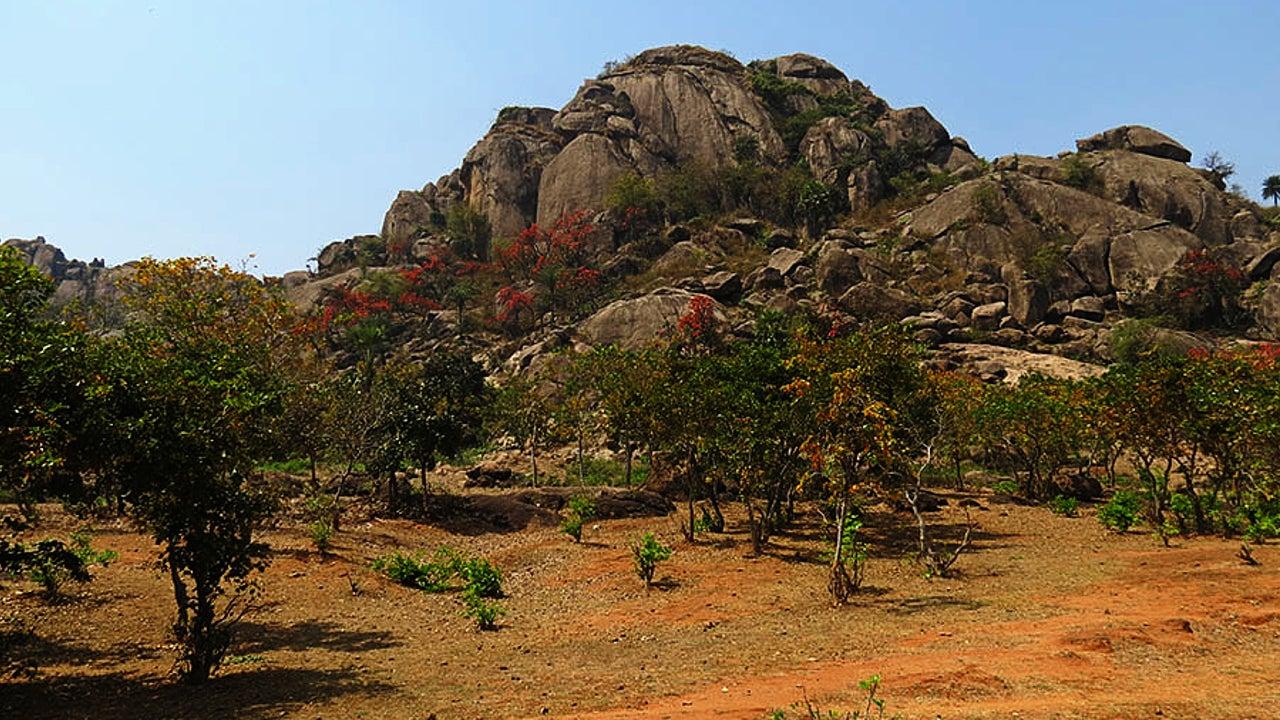
- 23 Feb 2024
Why is it in the News?
Exploring ancient cratons such as the Singhbhum Craton in India, alongside similar formations in South Africa and Australia, provides unparalleled insights into the early stages of our planet's development, reaching back approximately 3.5 billion years.
What is Singhbhum Craton?
- The Singhbhum Craton encompasses a vast expanse of rugged terrain, primarily spanning regions in Jharkhand and Odisha, situated between the Chhota Nagpur plateau and the Eastern Ghats.
- Dating back approximately 3.5 billion years, this ancient segment of the Earth's crust offers valuable insights into early geological processes.
- Its oldest rock formations consist predominantly of volcanic and sedimentary rocks, referred to as greenstone successions.
- Greenstones are characterised by submarine volcanic rocks with minor sedimentary components.
- Geologically akin to greenstone belts in South Africa's Barberton and Nondweni regions and the Pilbara Craton in Western Australia, these areas experienced extensive submarine mafic volcanic activity, rich in magnesium oxide, between 3.5 and 3.3 billion years ago, with preserved features like pillowed lava and komatiites.
Significance:
- The Singhbhum Craton sheds light on early tectonic activities during the Archaean era, enhancing our understanding of the Earth's formative stages.
- Its distinctive geological characteristics, particularly the presence of greenstone belts, yield invaluable data on surface and atmospheric processes crucial for theorising about early habitable conditions and the emergence of life on Earth.
What are Cratons?
- A craton is a stable and ancient part of Earth's lithosphere that has experienced long-term tectonic and geomorphic stability.
- It is considered to be the nucleus of a continent and is characterised by its thick and cold lithosphere.
- Cratons can undergo destruction, which is defined as a geological process resulting in the loss of craton stability due to changes in its physical and chemical properties.
- The mechanisms responsible for craton destruction include oceanic plate subduction, rollback and retreat of subducting plates, stagnation and dehydration of subducting plates in the mantle transition zone, melting of the mantle caused by dehydration of stagnant slabs, non-steady flow in the upper mantle induced by melting, and changes like the lithospheric mantle.
- Craton destruction can lead to crustal thinning, surface uplift, and the concentration of mineral deposits.
Atal Vayo Abhyuday Yojana (AVYAY)
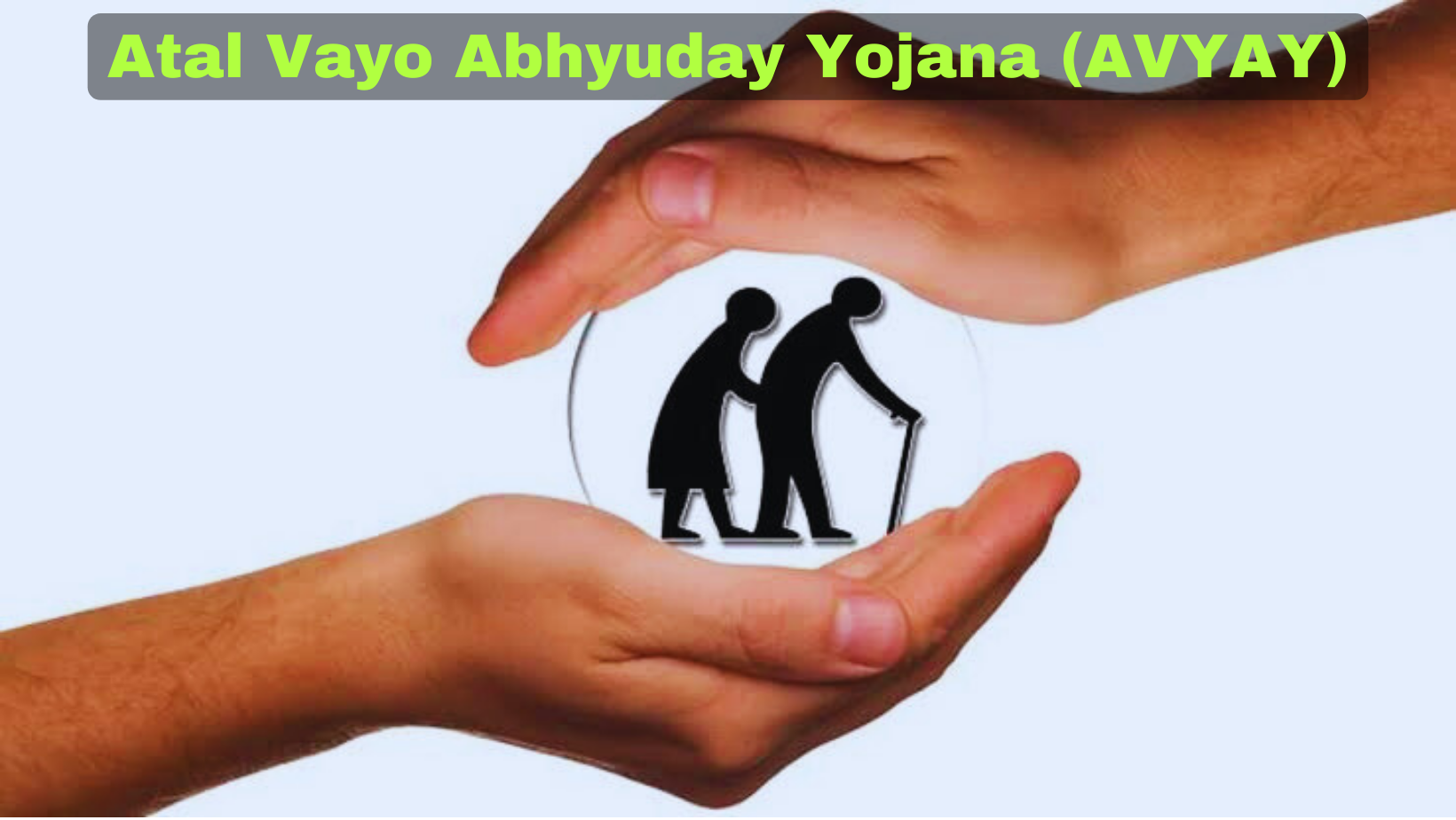
- 23 Feb 2024
Why is it in the News?
The Department of Social Justice and Empowerment, being the Nodal Department for the welfare of senior citizens, develops and implements programmes and policies for these groups in close collaboration with State Governments, Non-Governmental Organisations and civil society.
About the Atal Vayo Abhyuday Yojana (AVYAY):
- It is a Central Sector Scheme to improve the quality of life of the Senior Citizens.
- The project is implemented by the Department of Social Justice and Empowerment.
Aims and Objectives:
- The main objective of the Scheme is to improve the quality of life of Senior Citizens by providing basic amenities like shelter, food, medical care and entertainment opportunities and by encouraging productive and active ageing through providing support for capacity building of State/ UT Governments/Non-Governmental Organisations (NGOs)/Panchayati Raj Institutions (PRIs) / local bodies and the community at large.
The components of the AVYAY Scheme are as under:-
-
- Integrated Programme for Senior Citizens (IPSrC)
- State Action Plan for Senior Citizens (SAPSrC)
- Rashtriya Vayoshri Yojana (RVY)
- Elderline – National Helpline for Senior Citizens
- Senior-care Ageing Growth Engine (SAGE)
- Geriatric Caregivers Training
Components of the AVYAY Scheme:
- Integrated Programme for Senior Citizens (IPSrC): Grant aid is provided to Non-Governmental/ Voluntary Organizations for running and maintenance of Senior Citizens' Homes (old age homes), continuous care homes, etc.
- Facilities like shelter, nutrition, medicare and entertainment are provided free of cost to indigent senior citizens.
- State Action Plan for Senior Citizens (SAPSrC): Grant in aid is released to States/ UTs for the creation of a pool of trained Geriatric Caregivers for senior citizens, for carrying a special drive for Cataract Surgeries for Senior Citizens and State Specific Activities for the welfare of senior citizens, especially who are indigent in the States/UTs.
- Rashtriya Vayoshri Yojana (RVY): To provide for senior citizens, suffering from any age-related disability/infirmity such as low vision, hearing impairment, loss of teeth and loco-motor disabilities.
- The eligible senior citizens under this component are those who are in the BPL Category or have monthly income up to Rs.15000/.
- Generic and non-generic devices are distributed to the senior citizens through the camps.
- Elderline: National Helpline for Senior Citizens (14567): The Ministry has set up the National Helpline for Senior Citizens to provide free information, Guidance, Emotional Support and field intervention in cases of abuse and rescues.
- Senior-care Ageing Growth Engine (SAGE): To promote out-of-the-box and innovative solutions for commonly faced problems, innovative start-ups are identified and encouraged to develop products, processes and services for the welfare of the elderly under this initiative.
- The initiative is implemented through IFCI Venture Capital Funds Ltd. (Investment Manager).
- Geriatric Caregivers Training: To bridge the gap in supply and increasing demand in the field of geriatric caregivers and also to create a cadre of professional caregivers in the field of geriatrics.
- The component is implemented through the National Institute of Social Defence and at present 3,180 geriatric caregivers have been trained.
In a first, CERN scientists carry out laser cooling of Positronium
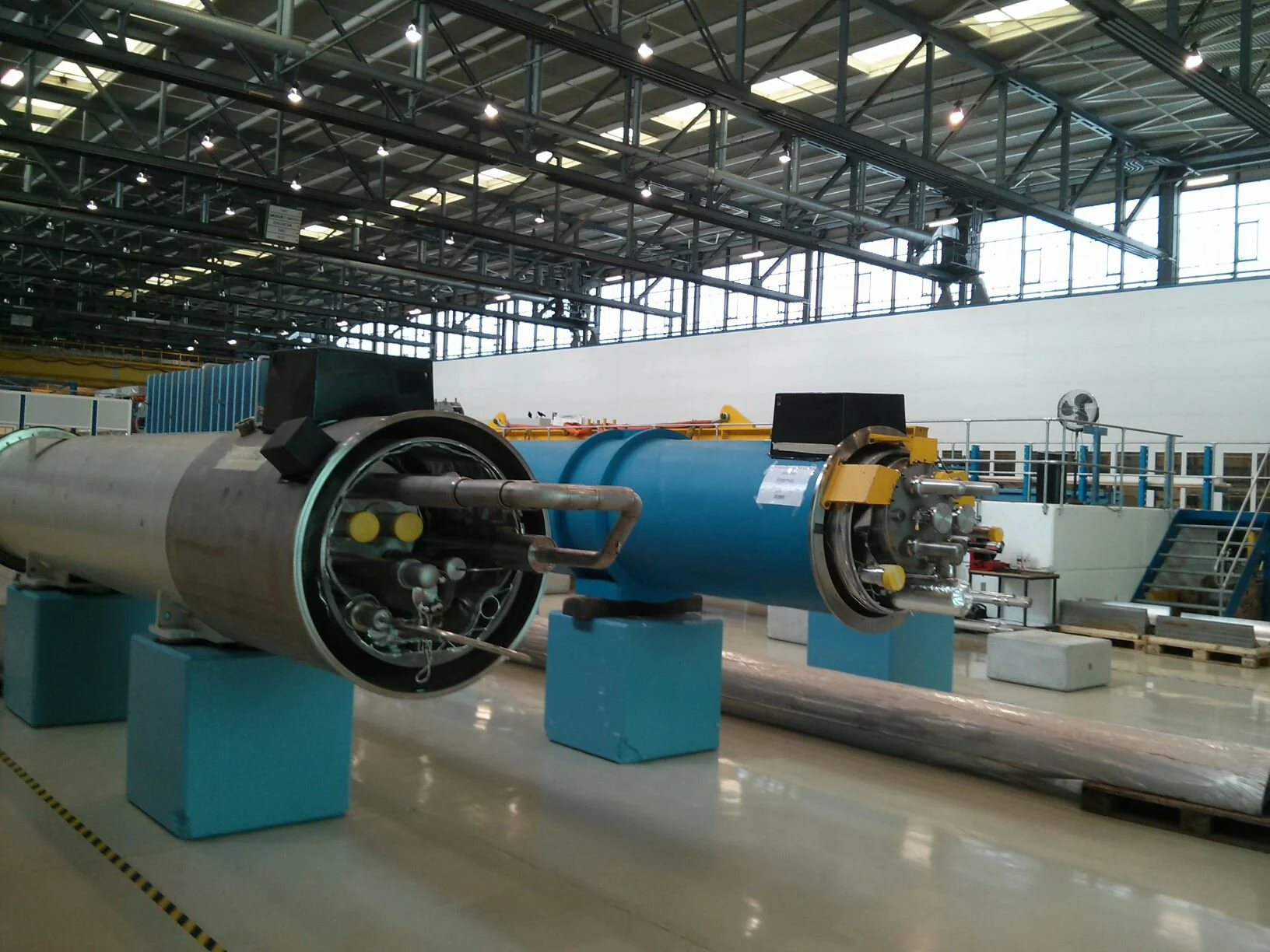
- 23 Feb 2024
Why is it in the News?
In a first, an international team of physicists from the Anti-hydrogen Experiment: Gravity, Interferometry, Spectroscopy (AEgIS) collaboration has achieved a breakthrough by demonstrating the laser cooling of Positronium.
About Anti-hydrogen Experiment: Gravity, Interferometry, Spectroscopy (AEgIS):
- AEgIS is an experiment at the Antiproton Decelerator facility at CERN (European Organization for Nuclear Research).
- It is a collaboration of physicists from a number of countries in Europe and from India.
- In 2018, AEgIS demonstrated the first pulsed production of antihydrogen atoms, by interacting pulse-produced positronium (an atom consisting of only an electron and a positron) with cold, trapped antiprotons.
- The primary scientific goal of the Antihydrogen Experiment: Gravity, Interferometry, Spectroscopy (AEgIS) is the direct measurement of the Earth's gravitational acceleration, g, on antihydrogen.
What is Positronium?
- Positronium is a bound state system of a positron and an electron, similar to the hydrogen atom, where an electron orbits around a proton.
- In the case of positronium, the positron and the electron orbit around their common centre of mass.
- The system is unstable, and the two particles eventually annihilate each other, releasing two or more gamma ray photons.
- Positronium has two possible states:
- The singlet state (para-positronium), in which the electron and the positron spins are antiparallel and the system has a shorter lifetime, and
- The triplet state (ortho-positronium), in which the electron and the positron spins are parallel, and the system has a longer lifetime.
- Positronium has been studied extensively in experimental and theoretical physics because it provides a simple system for testing quantum electrodynamics (QED) and for studying the properties of matter and antimatter.
- It also has potential applications in fields such as material science, plasma physics, and astrophysics.
What is Antimatter?
- Antimatter shares similarities with ordinary matter, except for its opposite electric charge.
- Often referred to as "mirror" matter, antimatter pairs with ordinary matter particles.
- For example, while an electron possesses a negative charge, its antimatter counterpart is a positron, which carries a positive charge and has the same mass as an electron.
- Positrons, antiprotons, and antineutrons are the antimatter counterparts of electrons, protons, and neutrons, respectively, collectively known as antiparticles.
- These antiparticles can combine to form anti-atoms and theoretically could lead to the formation of antimatter regions within our universe.
- However, the coexistence of matter and antimatter is short-lived due to their tendency to annihilate upon contact, resulting in the release of substantial energy in the form of gamma rays or elementary particles.
- Antimatter, like matter, emerged during the Big Bang.
- Scientists have produced antimatter particles through high-speed collisions in large particle accelerators like the Large Hadron Collider operated by CERN outside Geneva.
- Additionally, antiparticles are sporadically generated throughout the universe through natural processes.
Eminent Jurist Senior Advocate Fali Nariman passes away
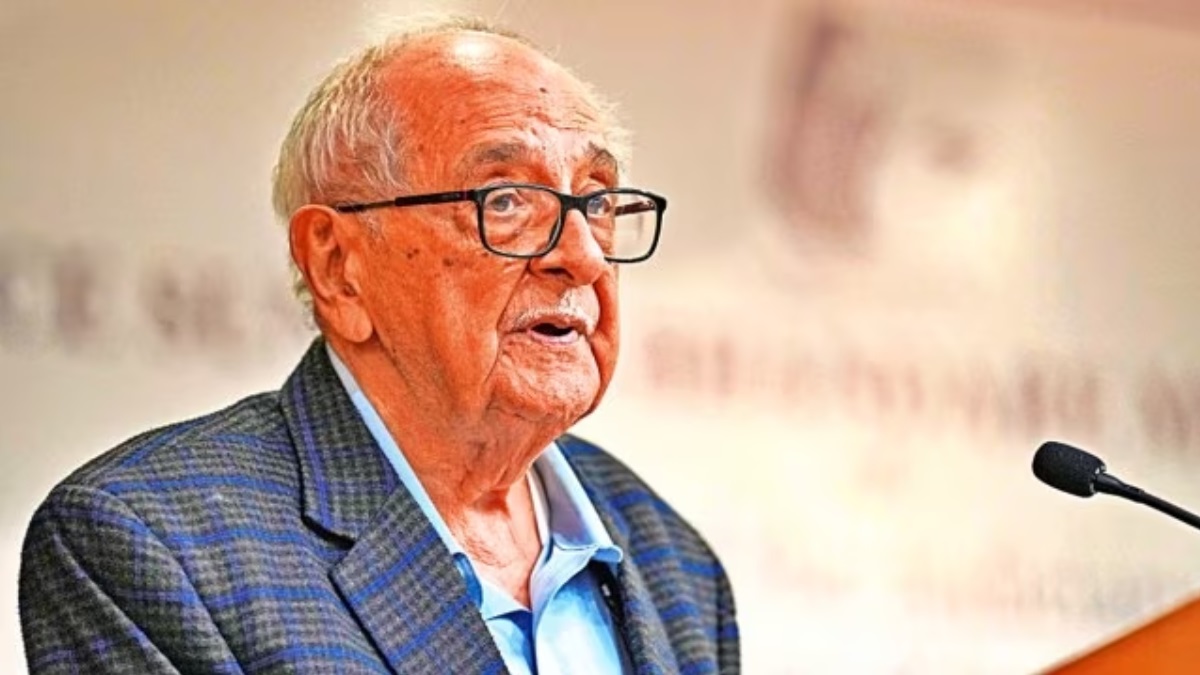
- 22 Feb 2024
Why is it in the News?
Recently, eminent jurist and senior advocate of the Supreme Court Fali S Nariman died at the age of 95.
Who was Fali S Nariman?
- Fali S Nariman was born on January 10, 1929, in Rangoon, then part of British India.
- He began his legal career by enrolling as an advocate of the Bombay High Court in November 1950.
- His stature grew, and he was designated as a senior advocate in 1961.
- In 1972, he moved to New Delhi to practise in the Supreme Court of India.
- In May 1972, Nariman assumed the role of additional solicitor-general of India; however, he resigned a day after the Emergency was imposed on June 26, 1975.
- He also served as the president of the International Council for Commercial Arbitration and chaired the Executive Committee of the International Commission of Jurists, Geneva, from 1995 to 1997.
- His son, Justice Rohinton F Nariman, formerly served as a judge on the Supreme Court.
- Nariman received the Padma Bhushan in January 1991 and in 2007 he was awarded the Padma Vibhushan.
What Were Some of Nariman's Landmark Cases?
- The Golak Nath case: In the historic judgement, the Supreme Court held that the Parliament cannot make a law which is capable of infringing the fundamental rights of citizens.
- It came up after two brothers in Punjab challenged the Constitution (17) Amendment Act, 1964, which came into effect by amending Article 31A of the Constitution. (This article deals with the acquisition of estates).
- Nariman, not only supported the petitioners but also appeared to argue on the issue representing the intervenors in the case.
- They argued that Parliament’s power to amend the Constitution under Article 368 did not include articles contained in Part III of the Constitution dealing with fundamental rights.
- Following the hearing of the case submitted in 1967, an eleven-judge bench agreed with the petitioner’s submissions pointing out that Article 13(2) states that Parliament cannot make a law which infringes fundamental rights.
- The Kesavananda Bharati case: The Kesavananda Bharati case is known for setting a benchmark in the Indian judiciary and had Nariman’s prompt representation in the SC.
- He assisted noted Advocate Nanabhoy Palkhivala in the famous case that led to the path-breaking judgement laying down the basic structure doctrine of the Constitution, clipping Parliament’s power to amend the Constitution.
- The 1973 verdict simultaneously gave the judiciary the authority to review any constitutional amendment on grounds of violation of the basic structure of the Constitution.
- The Bhopal Gas Tragedy case: In 1984, the Bhopal gas tragedy where 42 tons of toxic chemicals leaked from a pesticide plant owned by Union Carbide India Limited, resulting in thousands of deaths and environmental damage in the following years.
- The Supreme Court began hearing the case for compensation to the victims in 1988.
- Senior Advocate Nariman appeared, representing Union Carbide, and offered to pay a sum of 426 million dollars as compensation to the victims of the tragedy.
- In 1989, Union Carbide settled with the central government and agreed to pay 470 million dollars as compensation.
- The Cauvery Water Dispute case: Nariman represented Karnataka for over 30 years in the water-sharing dispute with Tamil Nadu.
- In 2016, the Supreme Court ordered the Karnataka government to release 6,000 cusecs (cubic feet per second) of water from September 21 to September 27.
- The Karnataka legislative assembly, however, passed a resolution stating that they did not have water to spare and chose to defy the court’s orders.
- Due to this non-compliance, Nariman refused to argue the case on behalf of the Karnataka government any further.
- On February 16, 2018, the court in its final judgement took note of Nariman’s stance on the issue and necessarily mentioned that Nariman had courageously lived up to the highest tradition of the Bar.
- The court then proceeded to reduce Karnataka’s annual water releases to 177.25 thousand million cubic feet (TMC) from 192 TMC.
- Disproportionate assets case against former Tamil Nadu Chief Minister J Jayalalithaa: AIADMK leader and former- Tamil Nadu CM Jayalalitha had been accused of misappropriating funds during her tenure between 1991 and 1995.
- A Sessions Court in Bangalore in September 2014 found that she had acquired property disproportionate to her known income and imposed a Rs 100 crore fine on her.
- This sentence was upheld by the Karnataka High Court a month later leading to an appeal at the Supreme Court.
- Nariman appeared on behalf of Jayalalitha in October 2014 and convinced the court to grant bail against executing the fine and suspend the sentence passed by the Sessions judge in Bangalore.
- The 1981 Second Judges case: The Supreme Court held that the primacy of the Chief Justice of India’s recommendation in judicial appointment and transfer can be turned down on cogent grounds by the government.
- However, the judicial discussions finally led to the creation of the collegium system of appointment of judges to constitutional courts in 1993, when the top court came out with its judgement in the second judge’s case.
- Nariman had stated that the advice given through consultation with the CJI must be seen as binding to protect the independence of the judiciary, as judges would be in a better position to determine the suitability and competence of candidates.
- In 1993, the nine-judge bench agreed with Nariman’s arguments and established the Supreme Court Collegium.
- The COVID-19 case: Nariman represented the Parsi community in its dispute over the protocol and standard operating procedure for handling of dead bodies of Parsi Zoroastrian COVID-19 victims under which metallic nets were to be installed above ‘Tower of Silence’ so that birds did not feed on the corpses and carry the killer virus elsewhere
Cabinet approves Flood Management and Border Areas Programme (FMBAP) for the period 2021-26
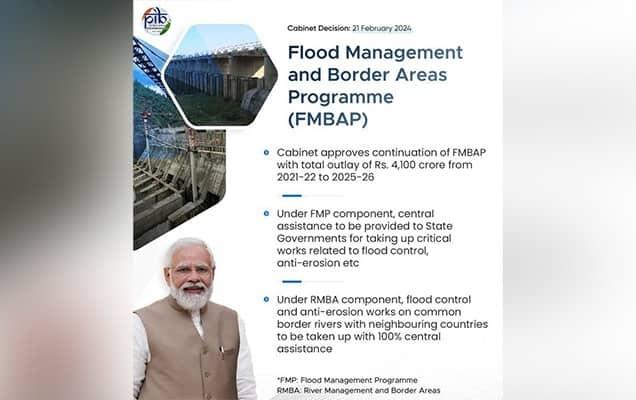
- 22 Feb 2024
Why is it in the News?
Recently, the Union Cabinet approved the continuation of “Flood Management and Border Areas Programme (FMBAP)” with a total outlay of Rs. 4,100 crore for a period of 5 years from 2021-22 to 2025-26.
About the Flood Management and Border Areas Programme (FMBAP):
- The FMBAP Scheme is being implemented throughout the country for effective flood management, erosion control and anti-sea erosion and to help in maintaining peace along the border.
- The scheme benefits towns, villages, industrial establishments, communication links, agricultural fields, infrastructure etc. from floods and erosion in the country.
- The catchment area treatment works will help in the reduction of sediment load into rivers.
- The Scheme aims at the completion of the ongoing projects already approved under FMP.
The Scheme has two components:
- Under the Flood Management Programme (FMP) component of FMBAP with an outlay of Rs. 2940 crore, central assistance will be provided to State Governments for taking up critical works related to flood control, anti-erosion, drainage development and anti-sea erosion, etc.
- The pattern of funding to be followed is 90% (Centre): 10% (State) for Special Category States (8 North-Eastern States and Hilly States of Himachal Pradesh, Uttarakhand and UT of Jammu & Kashmir) and 60% (Centre):40% (State) for General/ Non-Special Category States.
- Under the River Management and Border Areas (RMBA) component of FMBAP with an outlay of Rs. 1160 crore, flood control and anti-erosion work on common border rivers with neighbouring countries including hydrological observations and flood forecasting, and investigation & pre-construction activities of joint water resources projects (with neighbouring countries) on common border rivers will be taken up with 100% central assistance.
- The Scheme has the provision of incentivizing the States which implement flood plain zoning, recognized as an effective non-structural measure for flood management.
Importance:
- While the primary duty of flood management lies with the State Governments, the Union Government actively promotes and advocates for the adoption of modern technology and innovative approaches.
- Additionally, projects executed under the RMBA component serve to safeguard critical installations of security agencies and border outposts situated along border rivers from the perils of floods and erosion.
- Furthermore, the scheme includes provisions for incentivizing states that implement flood plain zoning, a recognized and effective non-structural measure for flood management.
Will the ‘Paruveta Festival’ celebrated in Andhra’s Ahobilam get UNESCO recognition?
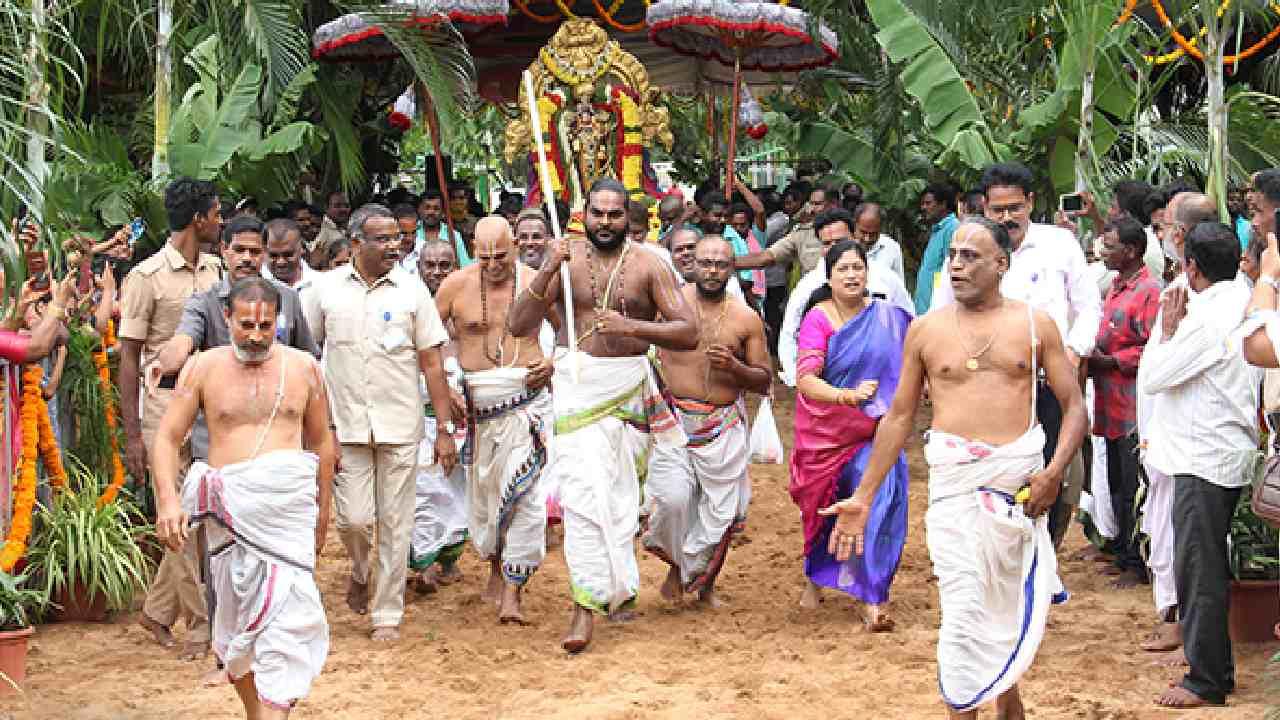
- 22 Feb 2024
Why is it in the News?
INTACH is striving to obtain UNESCO recognition for the yearly 'Paruveta' festival, emphasising its cultural significance.
About the Paruveta Festival:
- Paruveta Festival, also known as the 'mock hunting festival', is a celebrated tradition at the Sri Narasimha Swamy temple in Ahobilam, Andhra Pradesh.
- It stands out as a symbol of communal harmony, where devotees from various religious backgrounds, including Muslims, come together to offer prayers.
Origin and Significance:
- According to folklore, the festival commemorates Lord Vishnu's incarnation as Narasimha, who married Chenchulakshmi, a tribal girl, symbolising unity across different communities.
- The festival's rituals, typically observed during Vijayadashami or Sankranti, extend for a 'mandala' period of forty days in Ahobilam.
Activities and Customs:
- During the festival, the temple deity is carried to the 32 Chenchu tribal villages surrounding Ahobilam for forty days.
- The journey begins with a symbolic act where tribals shoot arrows at the deity's palanquin, signifying protection and reverence.
- Chenchus participated by undertaking 'Narasimha Deeksha', wearing yellow robes and Tulasi Mala, while observing celibacy.
- The temple staff reside in these villages throughout the festival, showcasing the tradition of a casteless society with no traces of untouchability.
Key Points about Chenchu Tribes:
- Geographic Distribution: Chenchu tribes primarily inhabit the hills of southern India, particularly in Andhra Pradesh.
- Additionally, Chenchu communities can be found in Tamil Nadu, Karnataka, and Orissa.
- Language and Communication: Their native language, known as Chenchu, belongs to the Dravidian language family.
- While many Chenchu individuals speak Telugu, their traditional language holds cultural significance.
- Livelihood and Occupation: Historically, Chenchu people pursued a nomadic lifestyle, relying on food gathering.
- However, due to factors such as agricultural expansion, many have transitioned to working as farmers or forest labourers.
- Housing and Settlements: Chenchu dwellings are typically hive-shaped structures constructed from wattle thatch, composed of interwoven poles, twigs, reeds, or branches.
- These houses reflect their traditional architectural style and are adapted to their environment.
- Social Structure: Chenchu society is organised into clans, which are extended family units, as well as local groups and individual families.
- They adhere to exogamous marriage practices, prohibiting unions within the same clan.
- Additionally, Chenchu kinship is patrilineal, tracing descent through male lineage.
Unauthorised online lending apps high on the FSDC scanner

- 22 Feb 2024
Why is it in the News?
Fresh measures to curb unauthorised online lending apps’ operations could be on the anvil, following deliberations on the issue at the Financial Stability and Development Council (FSDC) chaired by Finance Minister Nirmala Sitharaman recently.
About the Financial Stability and Development Council (FSDC):
- The Financial Stability and Development Council (FSDC) is a high-level body established by the Government of India in 2010 to address macroeconomic and financial stability issues.
- Although not a statutory body, it operates under the Financial Stability Division of the Department of Economic Affairs within the Ministry of Finance.
Background:
- In response to the global financial crisis of 2008, recommendations were made by the Raghuram Rajan Committee for the creation of a centralised regulatory body to oversee India's financial system.
- The establishment of FSDC reflects India's proactive approach to enhance preparedness for future financial challenges.
Composition:
- Chaired by the Union Finance Minister, the council comprises key stakeholders including the Governor of the Reserve Bank of India (RBI), finance and economic affairs officials, regulatory body chairpersons, and other relevant authorities.
- The Secretary of the Department of Economic Affairs serves as the council's secretary.
Responsibilities:
- FSDC is entrusted with the task of promoting financial stability, coordinating policy responses to systemic risks, and fostering the development of India's financial sector.
Concerns and Future Directions:
- Concerns have been raised about potential encroachment on the autonomy of sectoral regulators due to FSDC's leadership by the Union Finance Minister.
- To address this, it's crucial to safeguard the independence of regulatory bodies and establish clear guidelines to ensure effective coordination without undermining regulatory authority.
What is Digital Lending?
- Digital lending refers to the process of accessing credit online, facilitated through web platforms or mobile applications.
- This approach leverages technology across various stages of the lending process, including customer acquisition, credit assessment, approval, fund disbursement, recovery, and customer service.
Key Features:
- Utilises technology for end-to-end lending operations, enhancing efficiency and accessibility.
- Offers flexibility in credit options and facilitates swift transactions, appealing to modern borrowers.
- Prominent examples include Buy Now, Pay Later (BNPL) schemes, which provide short-term financing for purchases, allowing consumers to defer immediate payments.
Drivers of Growth:
- Increased adoption is driven by widespread smartphone usage and the convenience of online transactions.
- Flexibility in credit offerings and simplified application processes contribute to the popularity of digital lending platforms.
- BNPL services, in particular, cater to consumers seeking deferred payment options for purchases and services.
Centre increases Fair and Remunerative Prices of sugarcane
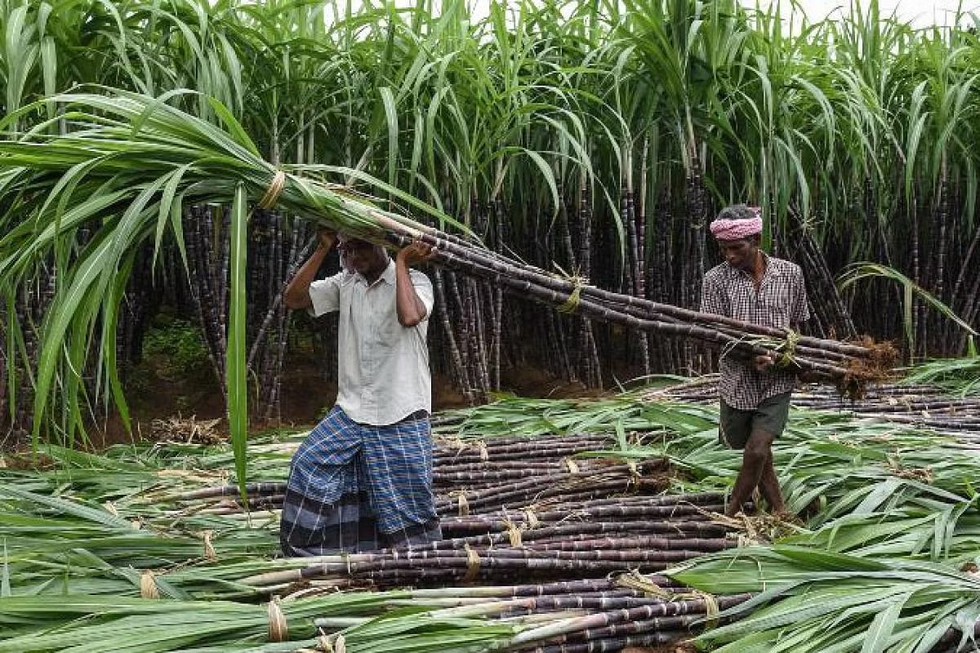
- 22 Feb 2024
Why is it in the News?
The Cabinet Committee on Economic Affairs recently approved ?340/quintal as the Fair and Remunerative Price (FRP) of sugarcane for the sugar season 2024-25 at a sugar recovery rate of 10.25%.
What is the Fair and Remunerative Price (FRP)?
- FRP was introduced by the government in 2009 by an amendment to the Sugarcane (Control) Order, 1966.
- It replaced the Statutory Minimum Price (SMP) on the Commission for Agricultural Costs and Prices (CACP) consultation.
- The FRP system assured timely payment to farmers, irrespective of the profit and loss to sugar mills.
- Further, the new system made it mandatory for sugar mills to pay the farmers within 14 days of delivery of sugarcane.
- Additionally, the FRP system introduced grading on the basis of sugar recovery rate from sugarcane wherein a premium was paid to the farmer on higher recovery and a reduction in rates on lower recovery.
- The FRP is based on the Rangarajan Committee report on reorganising the sugarcane industry.
Factors Considered for Announcing FRP:
-
- Cost of production of sugarcane
- Return to the growers from alternative crops and the general trend of prices of agricultural commodities
- Availability of sugar to consumers at a fair price
- The price at which sugar produced from sugarcane is sold by sugar producers
- Recovery of sugar from sugarcane
- The realisation made from the sale of by-products viz. molasses, bagasse and press mud or their imputed value
- Reasonable margins for the growers of sugarcane on account of risk and profits
Effect of the New FRP:
- Sugar production in India was hit hard in the October-December 2023 quarter as production fell by 11.21 million metric tonnes;
- It was 12 million in the same quarter the previous year.
- The increase in FRP is going to increase the cost for producers.
- The increased FRP will benefit over five crore sugarcane farmers in the country, however, the increase in production cost could affect end-consumers as well.
- Factors such as FRP hikes, akin to MSP, make it attractive to farmers but also increase prices in the local market as mills pass on that cost to consumers
WHO launches digital health platform agreed upon in India’s G20 presidency
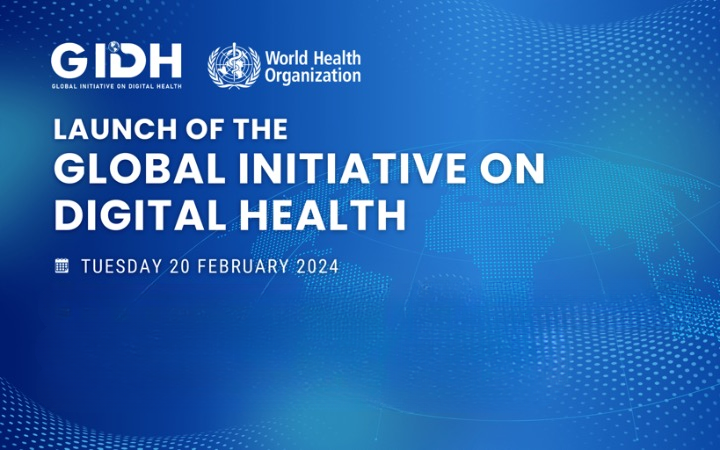
- 21 Feb 2024
Why is it in the News?
Achieving one of the three priority areas agreed upon during India’s G20 presidency in 2023, the World Health Organization (WHO) recently launched the Global Initiative on Digital Health (GIDH) virtually, a platform for sharing knowledge and digital products among countries.
About Global Initiative on Digital Health (GIDH):
- The Global Initiative on Digital Health (GIDH) is a network managed by the World Health Organization (WHO), dedicated to enhancing and coordinating efforts for country-led digital health transformation through collaborative partnerships and knowledge sharing.
- It was launched by the WHO and the Government of India during the G20 Health Ministerial Meeting in Gandhinagar.
- Functioning as a platform for inter-country knowledge exchange and digital product dissemination, GIDH strives to achieve several key objectives through collective action:
- Assess and prioritise countries' requirements for sustainable digital health transformation.
- Enhance the alignment of digital health resources and address unfunded priorities at the country level.
- Facilitate the accelerated attainment of the strategic objectives outlined in the Global Strategy on Digital Health 2020-2025.
- Promote capacity building and synergize efforts to support local development, maintenance, and adaptation of digital health technologies to evolving needs.
- Comprising four primary components, GIDH operates as a network of networks:
- Country Needs Tracker: Tracks and prioritises country-specific digital health requirements.
- Country Resource Portal: Provides a comprehensive map of available digital health resources within each country.
- Transformation Toolbox: Shares quality-assured digital tools to support country-led digital health initiatives.
- Knowledge Exchange: Facilitates the exchange of insights and best practices among member countries.
- GIDH extends support to countries in three fundamental ways:
- By attentively addressing their needs
- By fostering resource alignment to prevent fragmentation, and
- By offering access to quality-assured digital products.
- Membership in GIDH is open to all institutions actively involved in the digital health domain.
What is Digital Health?
- Digital health denotes the utilisation of technology, encompassing mobile devices, software applications, and various digital tools, to enhance health outcomes and streamline healthcare delivery.
- Essentially, it represents an interdisciplinary field at the intersection of technology and healthcare, integrating a diverse array of concepts and innovations.
- This encompasses a broad spectrum of technologies and services, spanning telemedicine, electronic health records, wearable devices, health information exchange, and more.
- Examples of notable digital health initiatives include India’s CoWIN platform and UNICEF's RapidPro and FamilyConnect programs.
- RapidPro, UNICEF’s real-time information platform, serves as a foundational component in its digital health portfolio.
- FamilyConnect, another UNICEF initiative, delivers targeted, lifecycle-based messages via SMS to various recipients, including pregnant women, new mothers, and heads of households.
India Initiatives on Digital Health:
- National Digital Health Mission (NDHM): Designed to establish a comprehensive national digital health ecosystem featuring unique health IDs, electronic health records (EHRs), and a platform for health data exchange.
- Ayushman Bharat Digital Mission (ABDM): Aims to develop a digital infrastructure for the Ayushman Bharat Health Infrastructure Mission (ABHIM), incorporating health registries, electronic claim processing, and telemedicine services.
- E-Sanjeevani Telemedicine Platform: Enables virtual consultations between healthcare providers and patients nationwide, enhancing access to medical care.
- Jan Arogya Setu App and CoWIN Platform: Offers access to healthcare services, facilitates appointment scheduling, and disseminates COVID-19-related information.
- Digital Aarogya Mitra (DAM): Implements a community health worker program utilising technology for data collection and community-based health interventions.
Malta becomes the 119th member of the International Solar Alliance
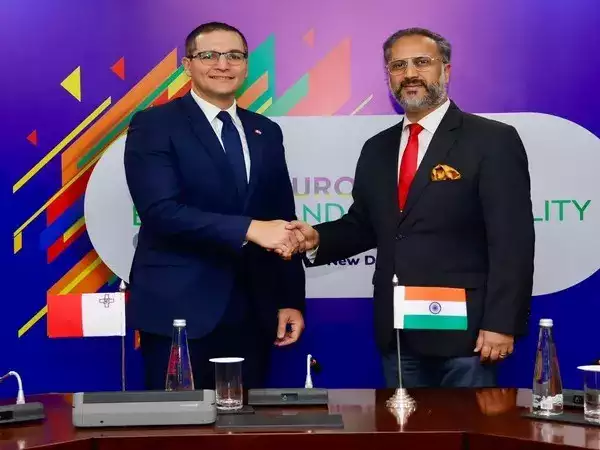
- 21 Feb 2024
Why is it in the News?
Malta became the 119th country to join the International Solar Alliance recently.
About the International Solar Alliance (ISA):
- The International Solar Alliance (ISA) is an alliance of more than 120 signatory countries that aims to reduce the dependence on non-renewable sources of energy like fossil fuels.
- Currently, 118 countries are signatories to the ISA Framework Agreement.
- The ISA is an action-oriented, member-driven, collaborative platform for increased deployment of solar energy technologies as a means for bringing energy access, ensuring energy security, and driving energy transition in its member countries.
- The platform strives to develop and deploy cost-effective and transformational energy solutions powered by the sun to help member countries develop low-carbon growth trajectories, with a particular focus on delivering impact in countries categorised as Least Developed Countries (LDCs) and the Small Island Developing States (SIDS).
- The ISA was conceived as a joint effort by India and France to mobilise efforts against climate change through the deployment of solar energy solutions.
- It was conceptualised on the sidelines of the 21st Conference of Parties (COP21) to the United Nations Framework Convention on Climate Change (UNFCCC) held in Paris in 2015.
Role of India:
- As a founding member, India holds a pivotal position within the alliance, serving both as a host nation and a major contributor to achieving its objectives.
- The ISA marks a historic milestone as the first international organisation to establish its secretariat in India.
- With a target of generating 100 GW of solar energy by 2022, India's commitment represents a significant portion of the ISA's overall goal.
Recent Developments:
- The ISA was granted Observer Status by the UN General Assembly, fostering closer collaboration between the alliance and the United Nations to advance global energy growth and development.
- The approval of the 'Solar Facility' by the ISA introduces a payment guarantee mechanism aimed at incentivizing investments in solar projects, further driving progress towards sustainable energy initiatives.
India contributes $1 million to fund combating poverty and hunger
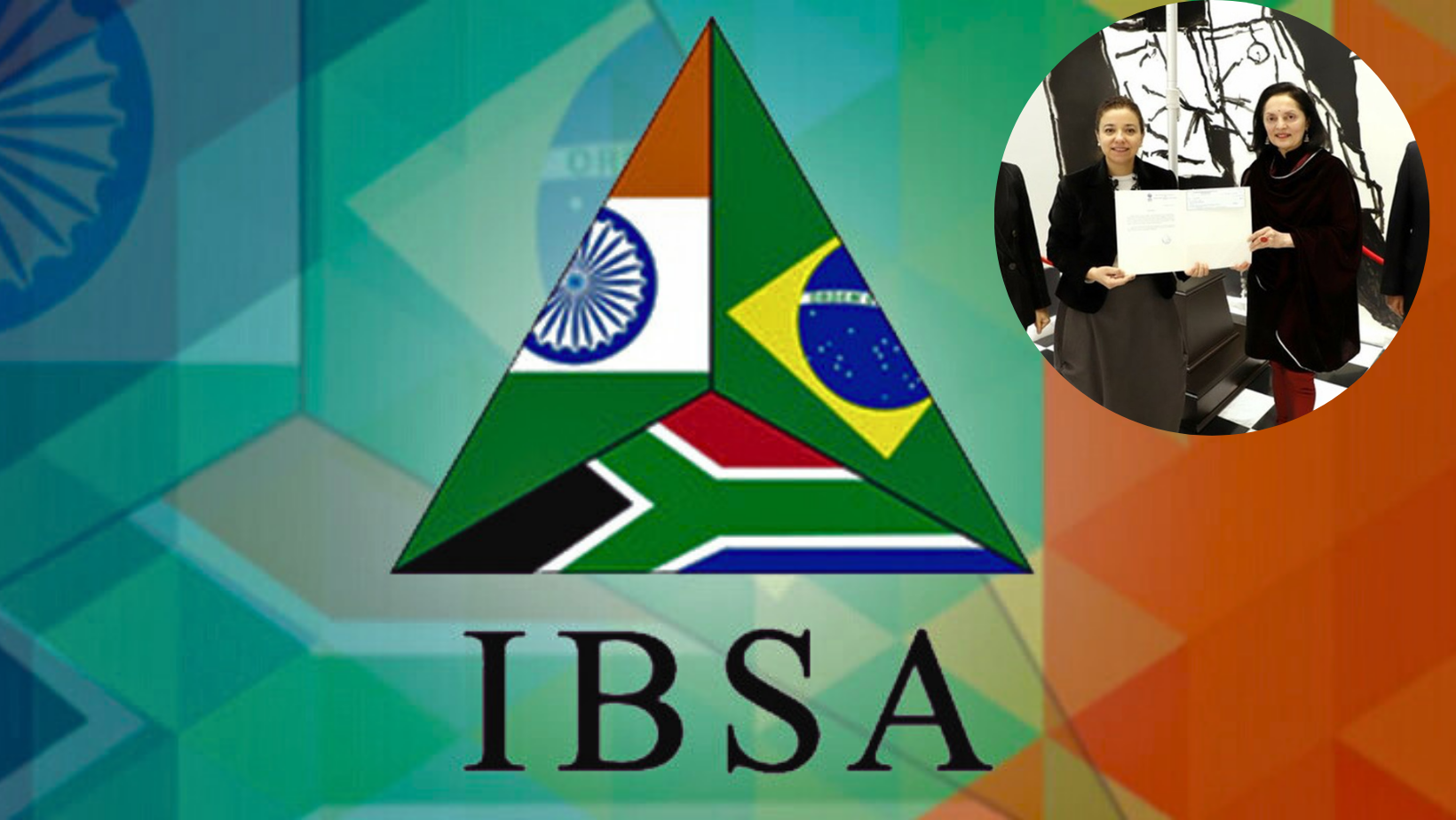
- 21 Feb 2024
Why is it in the News?
Recently, India has contributed 1 million US Dollars to the Poverty and Hunger Alleviation Fund established by India, Brazil, and South Africa, IBSA.
What is the IBSA Fund?
- Established in 2004 and operational since 2006, the IBSA Fund embodies the collaborative efforts of India, Brazil, and South Africa.
- Contributing one million dollars annually each, the IBSA countries unite in a spirit of partnership to champion Southern-led, demand-driven projects in developing nations.
- With a focus on identifying replicable and scalable initiatives, the fund aims to address pressing development challenges in recipient countries.
- Supported projects align with partner countries' national priorities and international development agendas, including the Sustainable Development Goals (SDGs).
- The fund's objectives encompass diverse areas such as promoting food security, combating HIV/AIDS, and expanding access to safe drinking water, among others, to advance sustainable development.
- To date, the IBSA Fund has allocated USD 50.6 million, funding 45 projects across 37 countries in the Global South.
- The United Nations Office for South-South Cooperation (UNOSSC) fulfils the roles of Fund Manager and Secretariat for the IBSA Fund.
What is IBSA?
- IBSA stands for the India, Brazil, and South Africa Dialogue Forum, a unique platform that unites three major democracies and significant economies from diverse continents, collectively addressing common challenges.
- Formally established as the IBSA Dialogue Forum during a historic meeting of the Foreign Ministers from India, Brazil, and South Africa in Brasilia on June 6, 2003, the forum's inception was marked by the issuance of the Brasilia Declaration.
- To date, five IBSA Leadership Summits have been convened, with the 5th Summit held in Pretoria on October 18, 2011.
- In 2021, India held the chairmanship of IBSA under the theme "Democracy for Demography and Development."
- On March 2, 2023, Brazil assumed the rotating presidency of the India, Brazil, South Africa Dialogue Forum (IBSA), further advancing the forum's collaborative agenda.
Global leaders converge in Delhi for Raisina Dialogue 2024
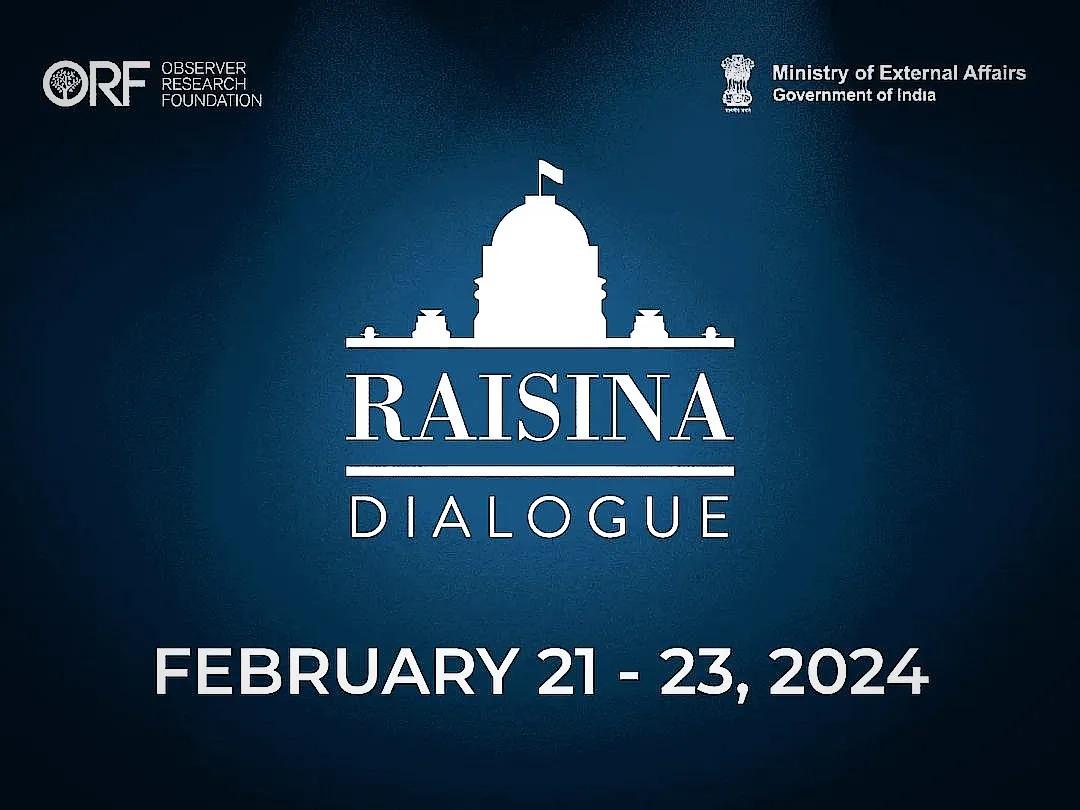
- 21 Feb 2024
Why is it in the News?
The ninth edition of the Raisina Dialogue will be held from today till Friday (February 23) in New Delhi.
What is the Raisina Dialogue?
- The Raisina Dialogue is India’s premier conference on geopolitics and geoeconomics committed to addressing the most challenging issues facing the global community.
- Every year, leaders in politics, business, media, and civil society converge in New Delhi to discuss the state of the world and explore opportunities for cooperation on a wide range of contemporary matters.
- The Dialogue is structured as a multi-stakeholder, cross-sectoral discussion, involving heads of state, cabinet ministers and local government officials, who are joined by thought leaders from the private sector, media and academia.
- The conference is hosted by the Observer Research Foundation in partnership with the Ministry of External Affairs, Government of India.
- This effort is supported by a number of institutions, organisations and individuals, who are committed to the mission of the conference.
- The theme of the 2024 edition is “Chaturanga: Conflict, Contest, Cooperate, Create”.
- During the three-day conference, the participants will engage with each other over six “thematic pillars”. These include:
- Tech Frontiers: Regulations & Realities
- Peace with the Planet: Invest & Innovate
- War & Peace: Armouries & Asymmetries
- Decolonising Multilateralism: Institutions & Inclusion
- The Post 2030 Agenda: People & Progress; and
- Defending Democracy: Society & Sovereignty.
After 30 years, Buddha relics travel to Thailand
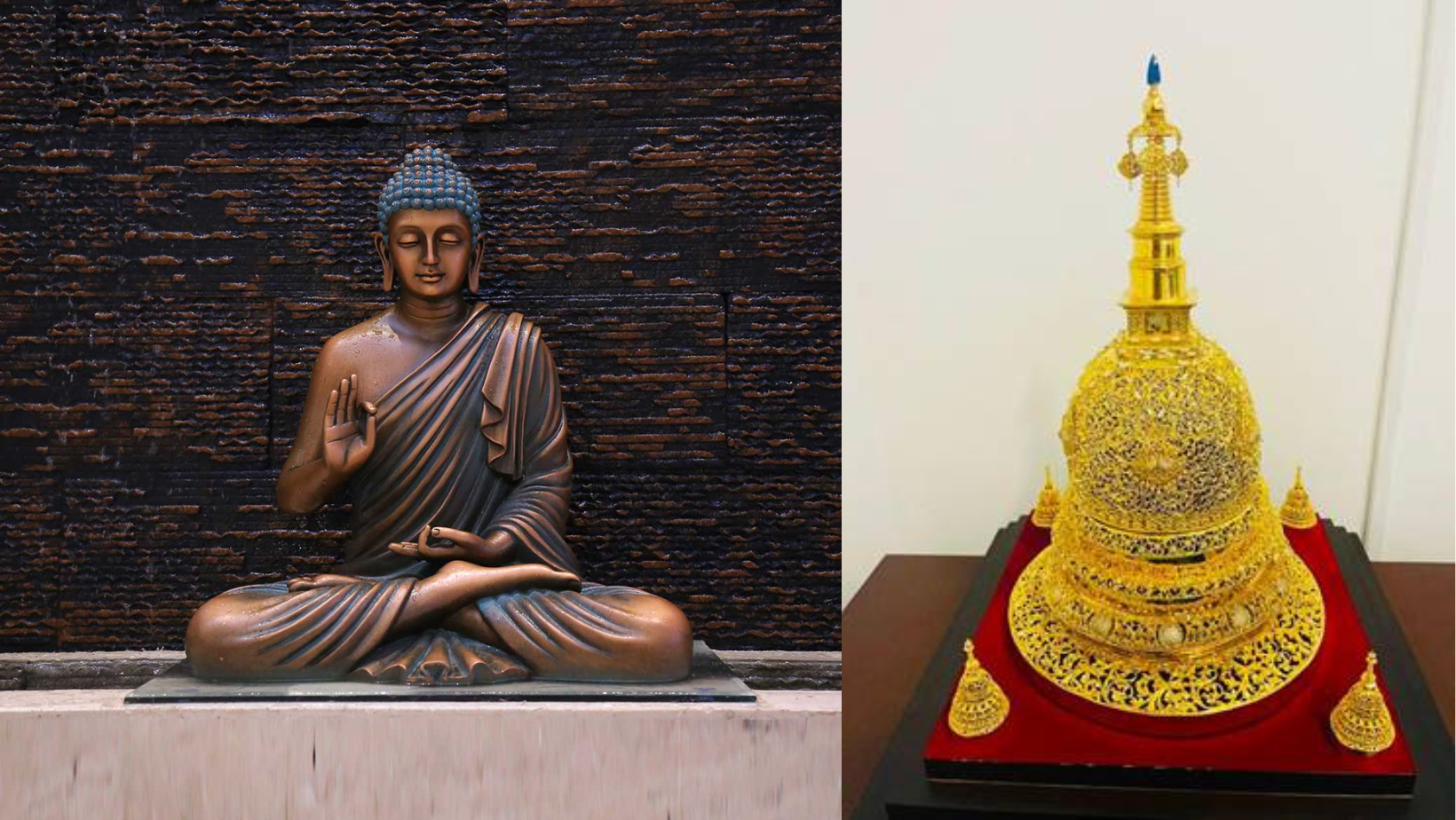
- 21 Feb 2024
Why is it in the News?
Four of the 20 relics of Lord Buddha preserved at the National Museum are being taken to Thailand for a month-long exposition beginning recently, in a rare trip abroad for the delicate antiquities recovered more than a century ago.
About the Relics of Lord Buddha:
- The relics of Lord Buddha and his disciples Arahata Sariputra and Arahata Maudgalayana are known as the ‘Kapilvastu Relics.’
- The relics date back to around the 4th or 5th Century BC.
- They were found in Bihar’s Piprahwa — a site that is believed to be the ancient city of Kapilvastu.
- Piprahwa today is located in Uttar Pradesh’s Siddharthnagar district.
- The relics were discovered by a team of Archaeological Survey of India (ASI) officials in the 1970s.
- The ASI conducted excavations at Piprahwa from 1971-77 under the supervision of the archaeology director KM Srivastava.
History:
- Lord Buddha achieved Mahaparinirvana at the age of 80 in Kushinagar.
- The Mallas of Kushinagara cremated his body with ceremonies befitting a ‘Universal King’ (‘cakravartin’).
- His holy relics, from the funeral pyre, were collected, divided and given by Brahmin priest Dhona of Kushinagar to kings and priests.
- The eight shares were distributed among Ajatashatru of Magadha, the Licchavis of Vaishali, the Sakyas of Kapilavastu, Mallas of Kushinagar, Bullies of Allakappa, the Mallas of Pava, the Koliyas of Ramagrama and a Brahmana of Vethadipa.
- The sacred relics were commemorated in eight different stupas.
- Two more stupas came into existence, one over the urn in which the relics had been collected and one over the embers.
- Thus, stupas erected over the bodily relics of Buddha (Saririka-stupas) are the earliest surviving Buddhist shrines.
- It is stated that Ashoka (circa 272-232 BC), being an ardent follower of Buddhism, opened up seven of these eight stupas, and collected a major portion of the relics for enshrinement within innumerable stupas built by him to popularise Buddhism and spread dharma.
- In 1898, the discovery of an inscribed casket by William Claxton Peppé, a British colonial engineer and an estate manager at a Buddhist stupa site at Piprahwa, was an epoch-making incident.
- The inscription on the lid referred to the relics of Buddha and his community.
- The bone relics present in the stone coffer were presented to King Rama V of Thailand.
- The relics were further divided into three shares and gifted to Thailand, Myanmar and Sri Lanka.
- In Thailand, the holy relic has been enshrined in a chedi on the top of Suwanbanphot, Bangkok.
- Every year, during the Loi Krathong Festival, there is a seven-day and seven-night celebration, which has become a tradition to worship the Buddha’s relics.
La Nina impacted air quality in India in the winter of 2022
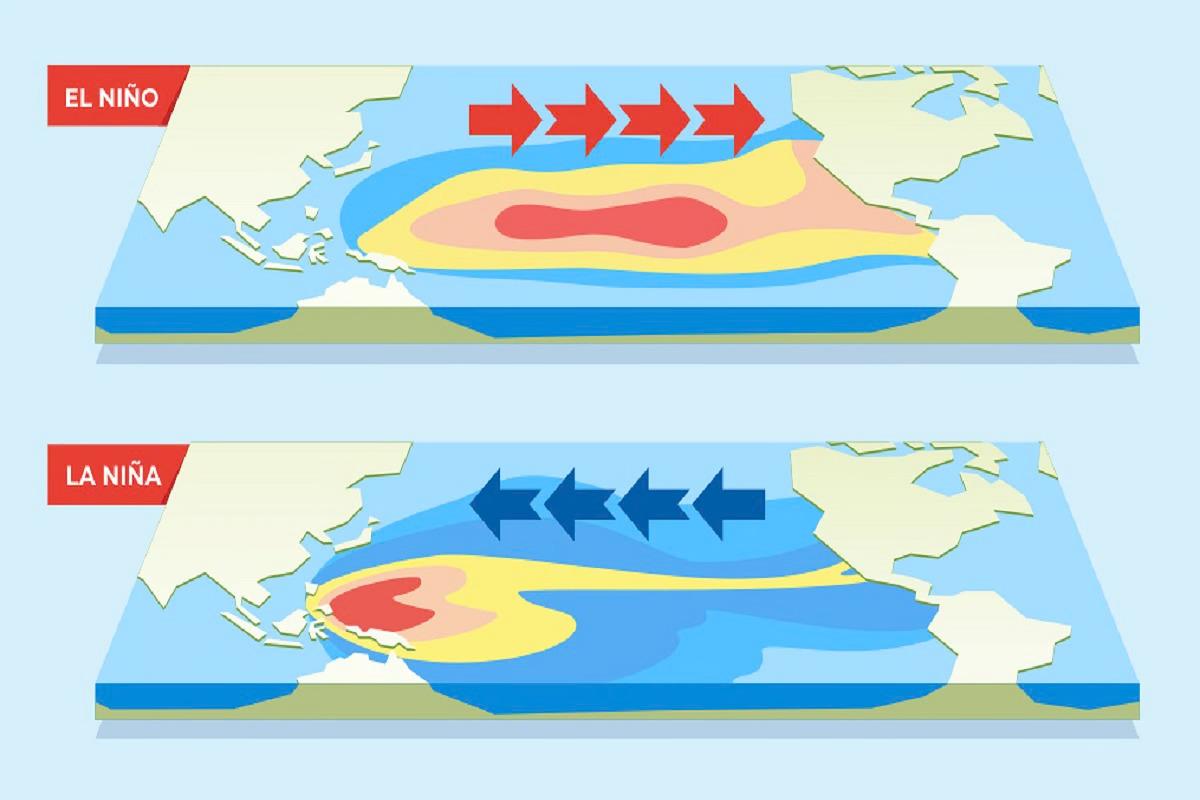
- 20 Feb 2024
Why is it in the News?
A new study suggests that monsoon rainfall over India, which is strongly influenced by El Niño and La Niña events—alternating warming and cooling of the eastern Pacific Ocean impacting global weather may also affect air quality in the country.
Key Findings of the New Study on the Impact of La Niña on Air Quality in India:
- According to the researchers at the National Institute of Advanced Studies (Bengaluru) and the Indian Institute of Tropical Meteorology (Pune), the strong influence of El Niño and La Niña events on monsoon rainfall over India, driven by the alternating warming and cooling of the eastern Pacific Ocean, with far-reaching effects on global weather patterns.
- Remarkably, this study marks the first time that air quality in Indian cities has been directly linked to a La Niña event, suggesting an indirect connection to climate change, which intensifies the severity of El Niño and La Niña occurrences.
- Traditionally, northern Indian cities, notably Delhi, face elevated concentrations of PM2.5 pollutants from October to January.
- However, the winter of 2022 witnessed a notable deviation from this trend, with northern cities experiencing cleaner air than usual, while western and southern cities like Mumbai, Bengaluru, and Chennai saw worsened air quality.
- Specifically, Delhi observed a 10% reduction in PM2.5 concentrations, contrasted with a 30% increase in Mumbai and a 20% rise in Bengaluru.
- The researchers, investigating this anomaly, identified the potent effects of the La Niña event, notably stronger than typical occurrences, leading to significant changes in wind circulation patterns over India.
- This impact became pronounced in the third year of La Niña, suggesting a cumulative effect that may amplify over time.
- While La Niña events are associated with improved air quality in northern India, the study emphasizes the need for further research to understand the potential impacts of El Niño events, which may produce contrasting effects on air quality across the country.
What are El Niño and La Niña?
- El Niño refers to a band of warmer water spreading from west to east in the equatorial Pacific Ocean.
- Similarly, a La Niña occurs when the band of water spreads east to west and is cooler.
- Both phenomena affect the weather worldwide and can have drastic effects on economies that depend on rainfall.
- Together, El Niño and La Niña make up a cyclical process called the El Niño Southern Oscillation.
- An El Niño year creates a global warming crisis in miniature because the warm water spreading across the tropical Pacific releases a large amount of heat into the atmosphere.
- El Niño: El Niño is characterized by warmer-than-average sea surface temperatures in the central and eastern Pacific Ocean.
- In India, El Niño events often correlate with below-average rainfall during the monsoon season.
- This can lead to drought conditions in some regions, affecting agriculture and water resources.
- El Niño can also influence temperature patterns, with some parts of India experiencing warmer temperatures during El Niño events.
- La Niña: La Niña is characterized by cooler-than-average sea surface temperatures in the central and eastern Pacific Ocean.
- In India, La Niña events often correlate with above-average rainfall during the monsoon season.
- This can lead to increased precipitation in some regions, potentially causing flooding, while other areas may experience drought conditions.
- La Niña can also influence temperature patterns, with some parts of India experiencing cooler temperatures during La Niña events.
Impact of La Niña on Air Quality in India:
- Altering Wind Patterns: During the winter of 2022, the typical north-westerly winds, carrying agricultural pollutants from Punjab and Haryana towards Delhi and the Gangetic plains, were disrupted.
- Instead, wind circulation shifted to a north-south direction, diverting pollutants away from Delhi.
- Consequently, pollutants bypassed Delhi, travelling over Rajasthan and Gujarat towards southern regions.
- Modifying Local Wind Circulation near Mumbai: In Mumbai, the local wind circulation, which alternates between land-to-sea and sea-to-land flows every few days, experienced prolonged unidirectional winds.
- This sustained wind pattern prevented the dispersal of pollutants from the city, leading to their accumulation within Mumbai's atmosphere throughout the winter of 2022.
- These changes in wind patterns, influenced by La Niña, significantly impacted air quality dynamics in India, highlighting the intricate relationship between climate phenomena and regional atmospheric conditions.
Gold Hunt by Villagers Reveals Ancient Harappan Settlement in Gujarat
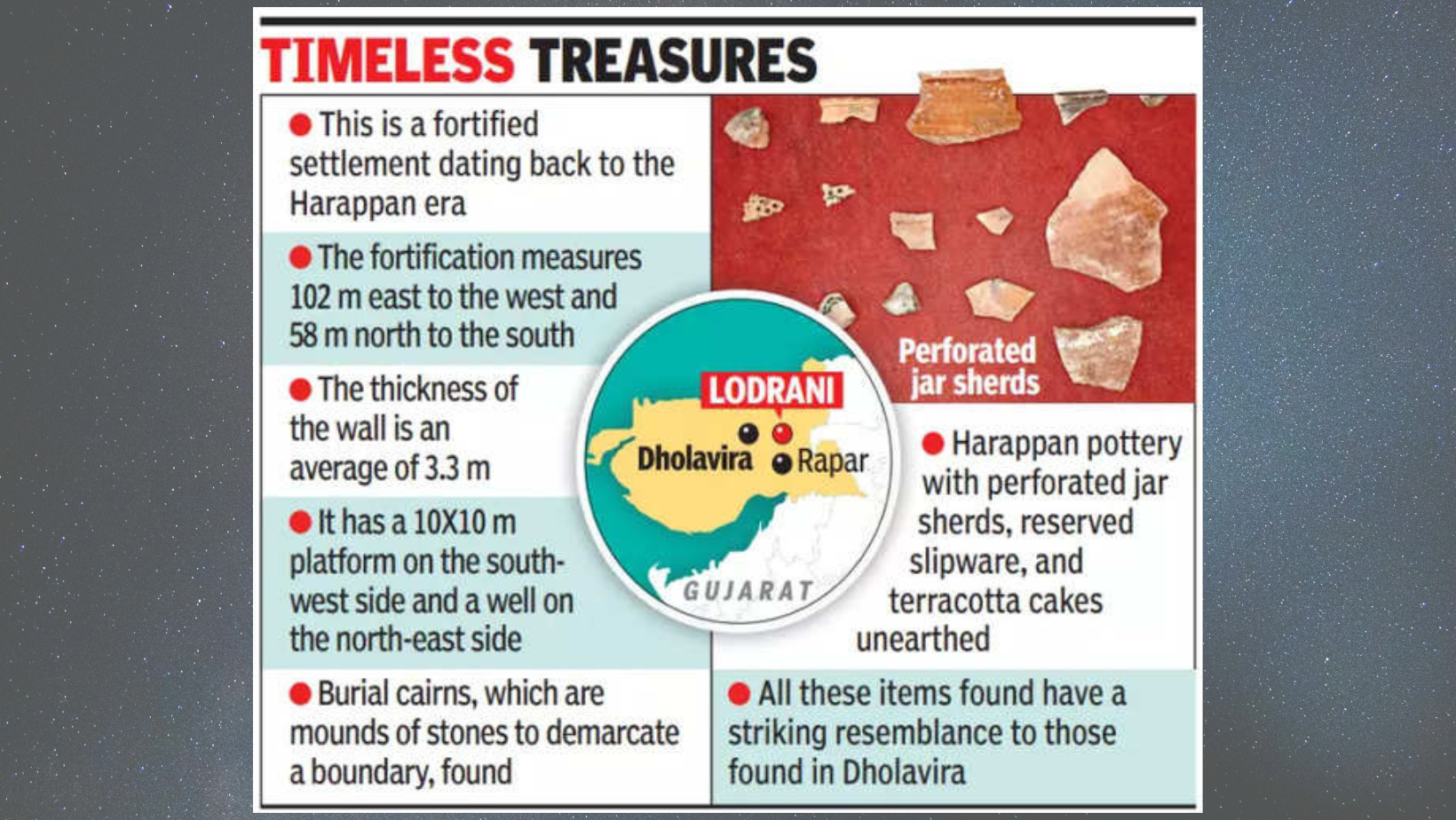
- 20 Feb 2024
Why is it in the News?
The newly discovered Harappan settlement at Lodrani village in the Kutch region of Gujarat has sparked widespread interest in the fascinating remains of this ancient civilisation, making it an important site for archaeological exploration and research.
Features of Harappan site Morodharo:
- Morodharo is a fortified settlement of the Harappan era, with the fortification measuring 102 m to the west and 58 m north to the south.
- The thickness of the wall is 3.3 m on average.
- Morodhara has a 10x10 m platform on the southwest side and a well on the northeast side.
- Burial cairns have been found at Morodharo.
- A cairn is an intentionally constructed mound of stones, typically created for marking a location or serving as a burial mound.
- Harappan pottery with perforated jar sherds, reserved slipware and terracotta cakes have also been unearthed.
- All these items have a striking resemblance to those found in Dholavira.
About Harappan Civilization:
- The Harappan civilization, also known as the Indus Valley civilization was South Asia's first urban civilization, flourishing concurrently with Mesopotamia and Egypt.
- It encompassed the most extensive territory, covering approximately 800,000 square kilometres, compared to its contemporaries.
- Prominent cities during the Harappan period included Harappa and Mohenjo-Daro in present-day Pakistan, along with Dholavira, Lothal, and Surkotada in Gujarat, India, among others.
- Urban planning in Harappan cities followed a meticulous grid layout, with streets intersecting at right angles, dividing the cities into neat rectangular blocks.
- The streets and alleys were deliberately designed for efficient movement, accommodating carts and pedestrians, often featuring covered drains alongside.
- For defence and security, the cities were enclosed by sturdy walls made of mud bricks, shielding against intruders and natural calamities.
- Each city was structured into an elevated citadel and a lower town, with the former housing monumental structures like granaries and administrative buildings.
- Residential areas comprised multi-story brick houses clustered around courtyards, some equipped with private wells and well-ventilated bathrooms.
- A sophisticated drainage system ensured efficient waste disposal, with individual house drains connected to street-level drainage networks.
- Granaries and storage facilities were strategically positioned to manage surplus agricultural yields, reflecting advanced urban planning and resource management.
BSNL floats Rs 65,000 crore tender for phase-III BharatNet project
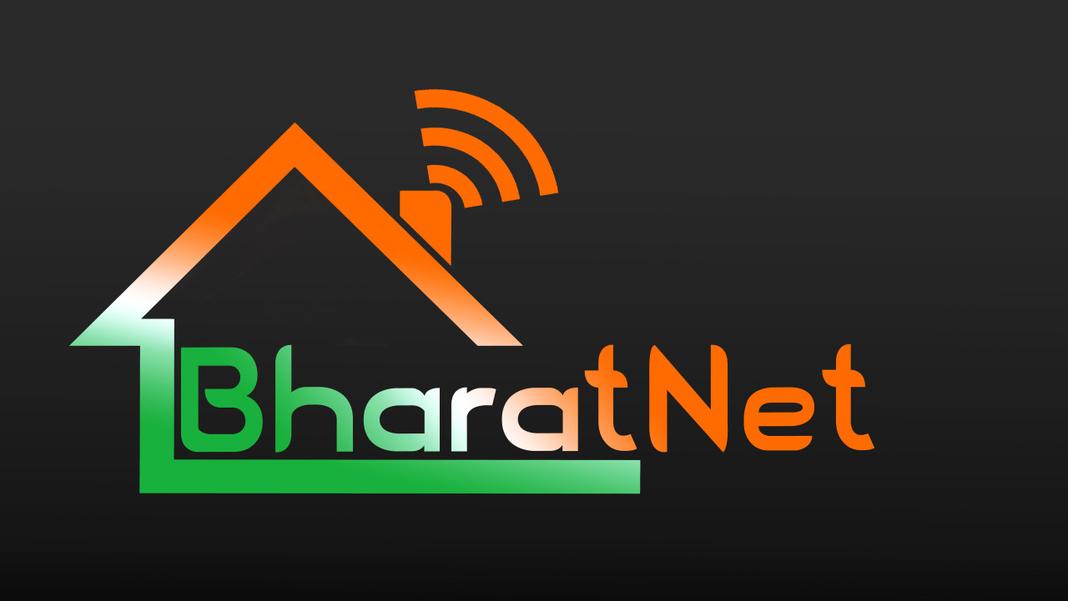
- 20 Feb 2024
Why is it in the News?
BSNL, the state-owned telecommunications company, has initiated a tender process amounting to approximately Rs 65,000 crore for the implementation of the phase-III BharatNet project.
What is the BharatNet Phase III Project?
- The BharatNet phase-III project adopts a three-level architecture:
- Internet leased line bandwidth
- Middle-mile connectivity, and
- Last-mile connectivity
- It aims to involve village-level entrepreneurs or Udyamis in providing last-mile connectivity to households on a revenue-sharing basis.
- BSNL aims to provide 15 million home fibre connections over five years using the BharatNet Udyami model.
About BharatNet Project:
- The BharatNet Project is one of the largest rural telecom projects in the world.
- It aimed at providing broadband connectivity to all Gram Panchayats across India in a phased manner.
- Its core objective is to ensure equitable access to broadband services for all telecom service providers, fostering the deployment of services like e-health, e-education, and e-governance in rural and remote areas.
- Initiated in 2011 and executed by Bharat Broadband Network Limited (BBNL), a Special Purpose Vehicle established in 2012, the project operates in three phases.
- Phase I launched in 2011, focused on creating the National Optical Fibre Network, leveraging existing infrastructure and laying additional fibre to bridge connectivity gaps up to the Gram Panchayat level.
- Phase II, approved in 2017, builds upon Phase I’s experiences, aligning with the Digital India vision.
- It adopts a flexible approach, integrating various media such as Optical Fibre Cable (OFC), Radio, and satellite to connect Gram Panchayats, utilizing models like State-led, Private Sector, and CPSU Models for implementation.
- Phase III, spanning from 2019 to 2023, aims to establish a robust, future-ready network with district-to-block fibre connectivity, featuring ring topology for redundancy.
- This comprehensive approach ensures the creation of a resilient and inclusive telecom infrastructure, facilitating socio-economic development in rural India.
Hundred years ago, Satyendra Nath Bose changed physics forever
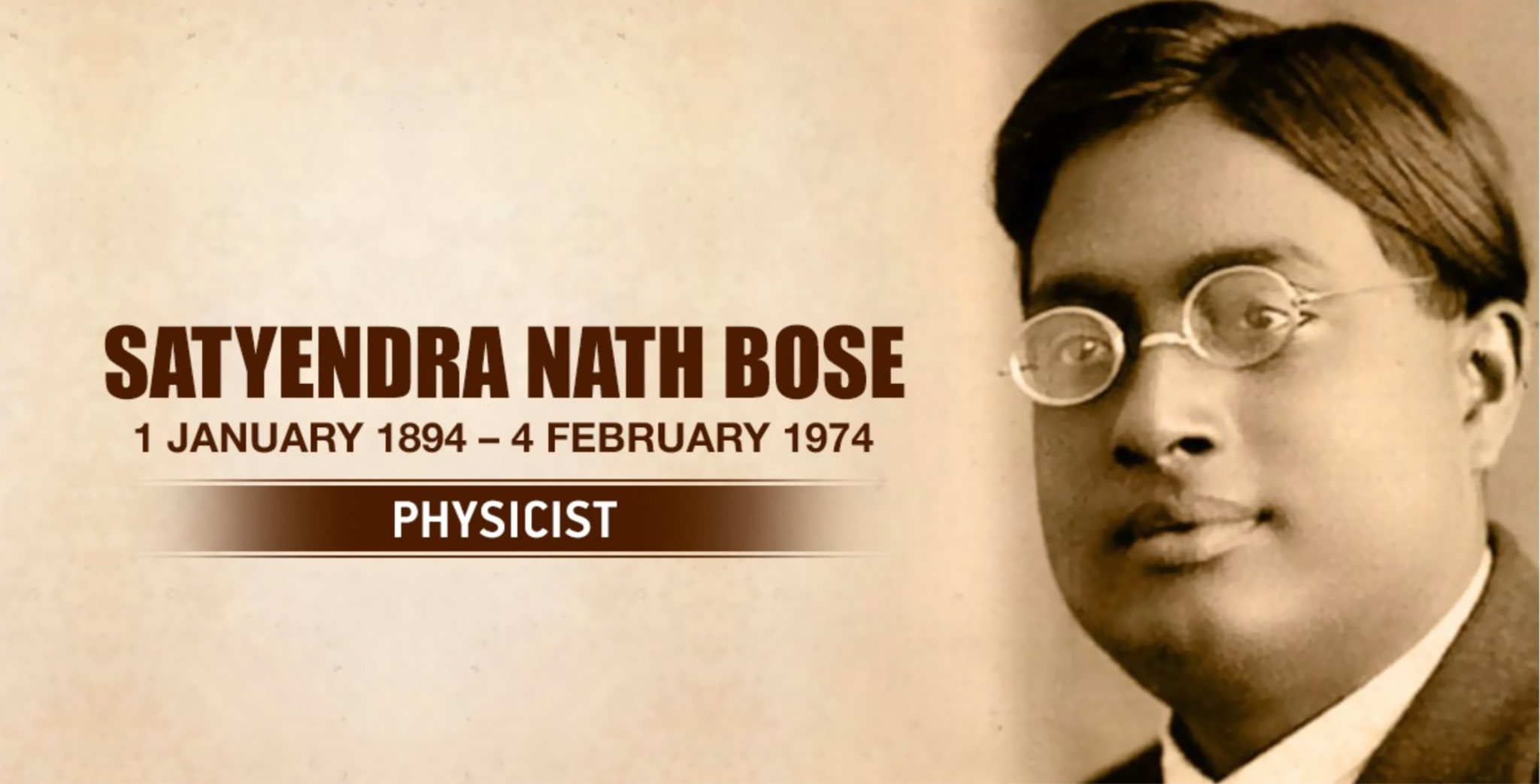
- 20 Feb 2024
Why is it in the News?
In 2024, we commemorate the centenary of Bose's pivotal discovery of the precise equations governing the behaviour of collections of photons, fundamental particles of light.
About Satyendra Nath Bose:
- Satyendra Nath Bose (1894-1974) was an eminent Indian physicist renowned for his pioneering contributions to theoretical physics, notably in the realms of quantum mechanics and statistical mechanics.
- His groundbreaking research laid the groundwork for Bose-Einstein statistics and the theoretical elucidation of Bose-Einstein condensate, a novel state of matter.
- Bose's profound insights not only advanced the understanding of fundamental physics but also played a pivotal role in refining the Standard Model of Particle Physics.
- His visionary work eventually paved the way for significant discoveries in particle physics, including the identification of the Higgs Boson, colloquially referred to as the "God Particle."
Major Contributions of Satyendra Nath Bose:
- Foundation of Bose-Einstein Statistics and Bosons: In 1924, Bose formulated a revolutionary explanation for Planck's law of black-body radiation using quantum mechanics principles, introducing the concept of "Bose-Einstein statistics."
- This theory delineates the behaviour of particles known as "bosons," characterized by integer spin.
- Bose-Einstein statistics elucidate how bosons, such as photons and atoms, preferentially occupy the same quantum state, a behaviour distinct from fermions governed by the Pauli exclusion principle.
- This groundbreaking work laid the groundwork for understanding particle behaviour at low temperatures and foretold the existence of the Bose-Einstein condensate, a novel state of matter.
- Prediction of Bose-Einstein Condensate: Bose's collaboration with Einstein in statistical mechanics led to the theoretical prediction of the Bose-Einstein condensate (BEC), a revolutionary concept in quantum physics.
- According to Bose-Einstein statistics, at ultra-low temperatures approaching absolute zero, bosons can congregate in the lowest energy state, forming a condensed state.
- Often dubbed the "fifth state of matter," BEC occurs when bosons lose sufficient energy to coalesce into a single quantum state, creating a cohesive "super-particle" cloud.
- Experimental confirmation of Bose-Einstein condensation in 1995, decades after Bose's theoretical proposal, garnered Eric Cornell, Carl Wieman, and Wolfgang Ketterle the Nobel Prize in Physics in 2001.
- Together with Meghnad Saha, he published the first English translation of Einstein’s papers on general relativity.
- His dedication to research and scientific integrity earned him numerous accolades, including the Padma Vibhushan and the Fellowship of the Royal Society.
Warming up to climate change: How does climate change impact extreme weather events?
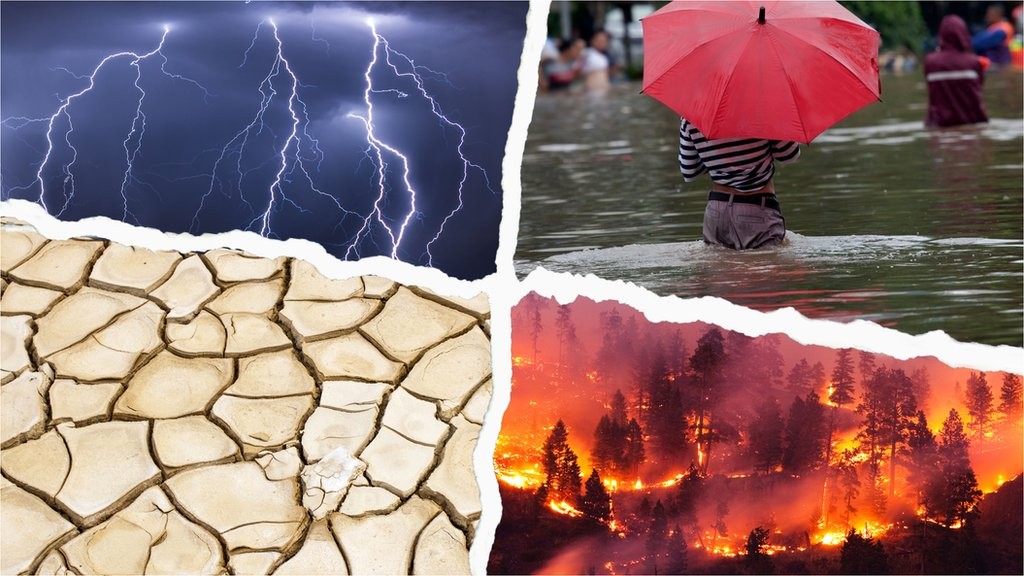
- 19 Feb 2024
Why is it in the News?
Extreme weather is becoming more frequent and more intense in many places around the world because of climate change.
How Does Climate Change Impact Extreme Weather Events?
- The Earth's average temperature has gone up by at least 1.1 degrees Celsius since 1850, mostly because of human activities like burning fossil fuels and deforestation.
- This temperature rise has led to more frequent and stronger extreme weather events worldwide, such as heatwaves, droughts, floods, hurricanes, and wildfires.
- It's hard to directly blame one single weather event on climate change because there are many factors involved.
- However, studies can tell us if climate change made a particular event worse or more likely to happen.
- For example, after a deadly heatwave in Western Europe in 2019, a study found that climate change made that heatwave five times more likely to occur.
- In India, heatwaves have become longer because of global warming, and they're expected to get even worse in the future.
- Climate models predict that by the 2040s, heatwaves might become 12 times more common.
- Higher temperatures also make droughts worse.
- In East Africa, for instance, a severe drought happened between 2020 and 2022, leading to famine and displacing millions of people.
- A report found that climate change made droughts like this at least 100 times more likely in that region.
- Warmer temperatures also contribute to wildfires by drying out land and making it easier for fires to start and spread.
- In Canada, for example, a study showed that climate change doubled the chances of extreme fire conditions.
- This was particularly concerning because Canada recently faced its worst wildfire season ever.
- As temperatures rise, the air can hold more moisture, leading to heavier rainfall and more flooding during storms.
- Warm air can also dry out the soil, making droughts worse. But when warm, moist air meets cooler air, it can lead to more intense storms and flooding.
- There's also evidence that climate change is making hurricanes stronger and more frequent.
- Warmer oceans provide more energy for hurricanes to form and intensify.
- The oceans have absorbed a lot of the extra heat from greenhouse gases, making them warmer.
- This, in turn, leads to stronger storms and more damage when they hit land.
- So, while climate change doesn't directly cause any single weather event, it's making extreme weather events more common and more severe, putting people and ecosystems at risk.
Bird flu outbreak in Andhra: Could H5N1 spark the next pandemic?

- 19 Feb 2024
Why is it in the News?
A bird flu outbreak in poultry in Andhra Pradesh’s Nellore district was reported recently. Laboratory tests by the National Institute of High-Security Animal Diseases in Bhopal confirmed that it was caused by the type A strain of the H5N1 variant of the avian influenza virus.
What is Bird Flu/Avian Influenza?
- Bird flu, also known as avian influenza, is a viral respiratory illness primarily affecting birds.
- It's caused by specific strains of the Influenza A virus.
- Bird flu spreads between both wild and domesticated birds.
- It has also been passed from birds to humans who are in close contact with poultry or other birds.
- There is no clear evidence that the virus can be transmitted from human to human.
- However, this may have happened in rare cases, where a person has become ill after caring for a sick family member.
- While most types don't infect humans, certain strains like H5N1, H7N9, and H5N6 have caused concern due to their ability to transmit to humans in rare cases.
- Transmission:
- Birds: Spreads easily between birds through bodily fluids (saliva, faeces, nasal discharge) and contaminated environments.
- Humans: Primarily occurs through direct contact with infected birds or surfaces, inhaling infected droplets, or consuming undercooked poultry meat from infected birds.
- Symptoms:
- The symptoms of bird flu in humans are similar to those of regular influenza and include:
- Can range from mild (fever, cough, sore throat, muscle aches) to severe (pneumonia, respiratory failure, multi-organ failure, death).
- Symptoms usually appear within 3-7 days of exposure.
- Treatment: Antiviral medications like Tamiflu have proven effective in managing human infections caused by avian influenza viruses, reducing both the severity of symptoms and the likelihood of fatalities.
Avian Influenza in India:
- Initial Incidence: The first instance of Highly Pathogenic Avian Influenza (HPAI) H5N1 in India occurred in 2006 in Navapur, Maharashtra, marking the onset of recurrent annual outbreaks.
- The emergence of H5N8 was documented in India in November 2016, primarily affecting wild birds in five states, with Kerala reporting the highest number of cases.
- This disease has been identified in 24 states and union territories, prompting the culling of over 9 million birds to curb its spread.
- Corresponding Strategy: India's strategy for managing Highly Pathogenic Avian Influenza (HPAI) revolves around a "detect and cull" approach, as delineated in the National Action Plan for Prevention, Control, and Containment of Avian Influenza (revised - 2021).
Banks to conduct periodic performance reviews of empanelled advocates to fast-track cases in DRTs
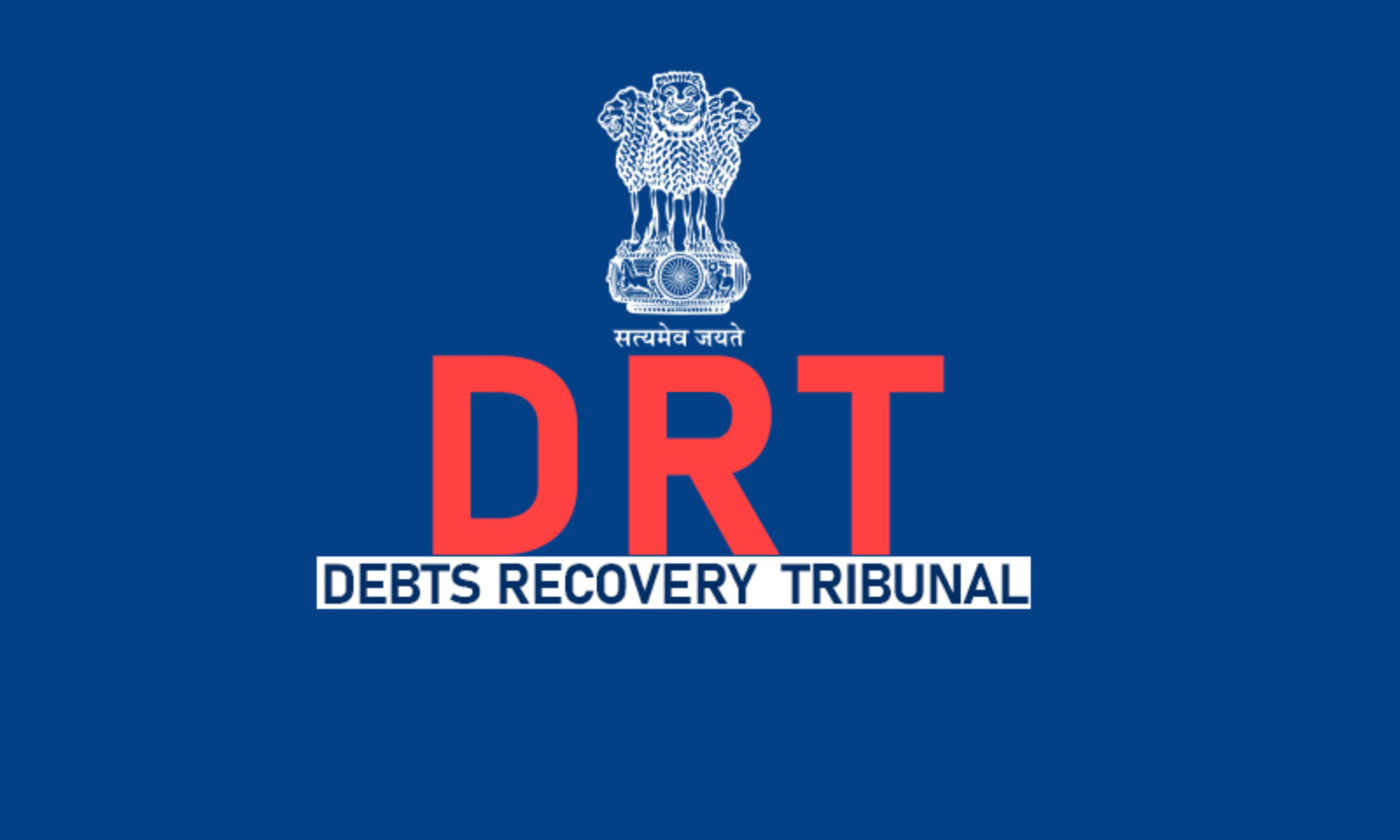
- 19 Feb 2024
Why is it in the News?
Banks will conduct periodical reviews of the performance of empanelled advocates at debt recovery tribunals (DRTs) and rationalise the cases assigned to them based on performance.
What is the Debt Recovery Tribunal?
- Debt Recovery Tribunal is a quasi-judicial body formed under the Recovery of Debts Due to Banks and Financial Institutions (RDDBFI) Act, 1993 to facilitate recovery of loans by banks and financial institutions to the customers.
- It was introduced as a response to the growing issue of Non-performing Assets (NPAs) and the need for a dedicated mechanism to resolve disputes related to debt recovery.
- These tribunals were instituted to offer a swifter and more effective alternative to traditional civil courts for the resolution of matters concerning debt recovery by banks and financial institutions.
- Its Appellate Tribunal is the Debt Recovery Appellate Tribunal (DRAT).
- Under Section 22 of the RDDBFI Act, 1993, both DRT and DRAT are mandated to adhere to the principles of natural justice, and proceedings before them are deemed to be judicial.
Jurisdiction of Debt Recovery Tribunal:
- They are empowered to adjudicate cases brought forth by banks, financial institutions, and related entities seeking the recovery of outstanding amounts.
- DRTs preside over matters surpassing a designated monetary threshold, and their rulings carry the weight of civil court decrees.
- The scope of DRT jurisdiction encompasses a broad spectrum of financial claims, encompassing loans, advances, and financial aid extended by banks and financial institutions.
Powers of DRT:
- Under Section 22(2) of the RDDBFI Act, 1993, the DRT possesses the following powers:
- Summoning individuals and compelling them to testify under oath.
- Demanding the disclosure and presentation of documents.
- Accepting evidence through affidavits.
- Issuing commissions to examine witnesses or documents.
- Revisiting its rulings.
- Rejecting applications due to default or adjudicating them in absentia.
- Revoking any order of dismissal stemming from default or any order passed in absentia.
- Addressing any other matters stipulated by regulations.
- The organisational framework of the Debt Recovery Tribunal:
- DRTs fall under the purview of the Ministry of Finance and operate akin to judicial courts.
- Each DRT is helmed by a Presiding Officer, who must hold qualifications equivalent to that of a District Judge.
- The Presiding Officer is appointed for a tenure of five years or until reaching the age of 62, whichever comes first.
- Appointment of the Presiding Officer is vested in the Central Government.
- At present, 39 DRTs and 5 DRATs are functioning across the country.
- Each DRT and DRAT are headed by a Presiding Officer and a Chairperson respectively.
Key aspect in poll bond case still alive: Money Bill route
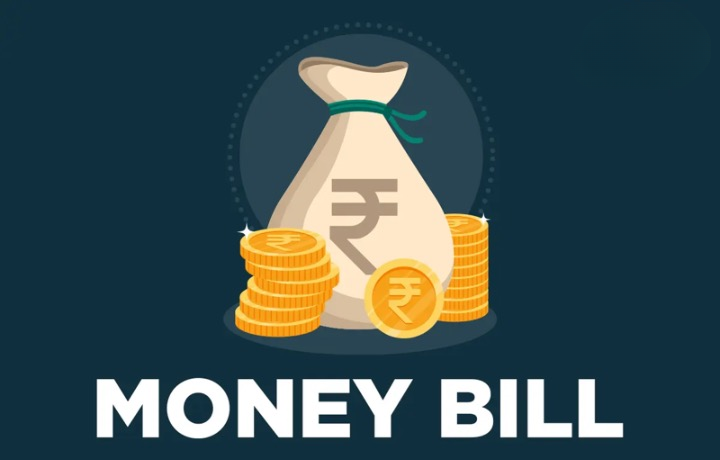
- 19 Feb 2024
Why is it in the News?
Even as a five-judge bench of the Supreme Court struck down the electoral bonds scheme as unconstitutional recently, it saved one aspect of the challenge for another day and a larger bench – the issue of the government using the money Bill route to bring in the laws that introduced the electoral bonds.
News Summary:
- A recent ruling by a five-judge bench of the Supreme Court invalidated the electoral bonds scheme, citing it as unconstitutional.
- However, the court reserved one aspect of the challenge for further review by a larger bench – specifically, the government's use of the money Bill route to enact the laws introducing the electoral bonds.
The Supreme Court highlighted that:
- The examination of introducing these amendments through a money Bill under Article 110 of the Constitution was not addressed.
- The interpretation of Article 110 of the Constitution has been referred to a seven-judge Bench and remains pending judicial review.
What are Money Bills?
- According to Article 110, a money Bill encompasses provisions related to taxes, government borrowing, and expenditure from the Consolidated Fund of India, among other financial matters.
- Article 109 outlines the process for the passage of such Bills, granting predominant authority to the Lok Sabha in their enactment.
- The Speaker is responsible for certifying a Bill as a Money Bill, with the Speaker's decision being final.
- In the past seven years, the government has utilised the money Bill route to introduce various legislations, notably including the Aadhaar Act, 2016, and the Finance Act, 2017.
Other Instances of Government Utilising Money Bill Route:
- Several significant legislations have been enacted by the government through the money Bill route, including:
- The Finance Acts of 2016 and 2018, introduced amendments to the Foreign Contribution Regulation Act, of 2010.
- The Tribunals Reforms Act was passed as a money Bill in 2017.
- The rigorous amendments to the Prevention of Money Laundering Act (PMLA) in 2022, alongside the enactment of the Aadhaar Act in 2018.
- The Supreme Court has upheld the validity of the PMLA amendments and the legality of the Aadhaar Act.
- Notably, Chief Justice of India Chandrachud dissented in the five-judge bench decision that upheld the Aadhaar Act, criticising the government's use of the money Bill route as a subversion of the Constitution.
- However, these laws may still face scrutiny and potential invalidation if the court determines that they were enacted through improper procedure, namely, utilising the money Bill route.
Difference Between Money Bills and Financial Bills:
- While every Money Bill is categorised as a Financial Bill, not every Financial Bill qualifies as a Money Bill.
- For instance, a Finance Bill solely dedicated to tax proposals is deemed a Money Bill.
- Conversely, a Financial Bill may include provisions on taxation or expenditure alongside other subjects.
- The Compensatory Afforestation Fund Bill, 2015, which establishes funds under the Public Account of India and states, serves as an example of a Financial Bill.
The process for passing these two types of bills varies considerably.
-
- The Rajya Sabha lacks the authority to reject or amend a Money Bill.
- Following passage by the Lok Sabha, Money Bills are referred to the Rajya Sabha for recommendations.
- Within 14 days, the Rajya Sabha must return the Bill to the Lok Sabha with its suggestions, which are not binding.
- Should the Lok Sabha reject the recommendations, the Bill is considered passed by both Houses in its original form from the Lok Sabha.
- If the Rajya Sabha fails to provide recommendations within 14 days, the same outcome applies.
- However, both Houses of Parliament must approve a Financial Bill.
- While an ordinary Bill can originate in either House, a Money Bill can only be introduced in the Lok Sabha, per Article 117(1).
- Moreover, only on the President's recommendation can anyone introduce or propose Money Bills in the Lok Sabha.
- Amendments related to reducing or abolishing any tax are exempt from requiring the President's recommendation.
- The essential conditions for a Financial Bill to attain Money Bill status are that it must solely originate in the Lok Sabha, not the Rajya Sabha, and must be introduced upon the President's recommendation.
INCOIS, ISRO to study rip currents for safer beaches
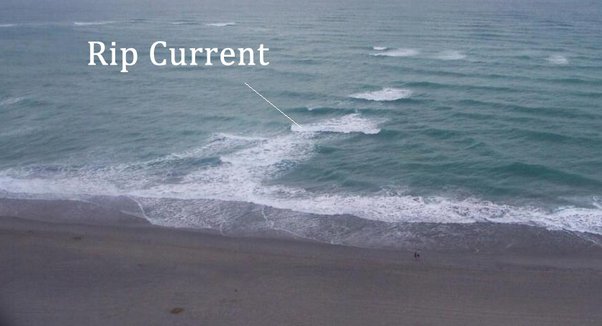
- 19 Feb 2024
Why is it in the News?
Indian National Centre for Ocean Information Services (INCOIS) and Indian Space Research Organisation (ISRO) have embarked on a project to continuously monitor and issue operational forecast alerts of rip currents.
What is a Rip Current?
- Rip currents are channelled currents of water flowing away from shore at surf beaches.
- They typically extend from near the shoreline, through the surf zone and past the line of breaking waves. (The surf zone is the area between the high tide level on the beach to the seaward side of breaking waves.)
Formation of Rip Currents:
- Rip currents form when waves break near the shoreline, piling up water between the breaking waves and the beach.
- One of the ways this water returns to sea is to form a rip current, a narrow stream of water moving swiftly away from shore, often perpendicular to the shoreline.
Size of the Rip Currents:
- Rip currents can be as narrow as 10 or 20 feet in width though they may be up to ten times wider.
- The length of the rip current also varies.
- Rip currents begin to slow down as they move offshore, beyond the breaking waves, but sometimes extend for hundreds of feet beyond the surf zone.
Speed of the Rip Current:
- Rip current speeds can vary. Sometimes they are too slow to be considered dangerous.
- However, under certain wave, tide, and beach-shape conditions the speeds can quickly become dangerous.
Are All Rip Currents Dangerous?
- Rip currents are present on many beaches every day of the year, but they are usually too slow to be dangerous to beachgoers.
- However, under certain wave, tide, and beach-shape conditions they can increase to dangerous speeds.
- The strength and speed of a rip current will likely increase as wave height and wave period increase.
How Do Rip Currents Result in the Drowning of Swimmers?
- Drowning deaths occur when people pulled offshore are unable to keep themselves afloat and swim to shore.
- This may be due to any combination of fear, panic, exhaustion, or lack of swimming skills.
- Rip currents are the greatest surf zone hazard to all beachgoers. They can sweep even the strongest swimmer out to sea.
- Rip currents are particularly dangerous for weak and non-swimmers.
ISRO’s ‘Naughty Boy’ Rocket Launches INSAT-3DS (Indian Express)

- 17 Feb 2024
Why is it in the News?
The Indian Space Research Organisation (ISRO) recently launched its weather satellite INSAT-3DS board spacecraft Geosynchronous Launch Vehicle (GSLV) F14, nicknamed the ‘naughty boy’ for its spotty record.
What is the GSLV-F14?
- The Geosynchronous Satellite Launch Vehicle (GSLV), standing at a height of 51.7 metres, is a three-stage launch vehicle with a liftoff mass of 420 tonnes.
- First stage: Its first stage (GS1) features a solid propellant (S139) motor with 139 tons of propellant and four earth-storable propellant stages (L40) strapons, each carrying 40 tons of liquid propellant.
- Second Stage: The second stage (GS2) also utilises an earth-storable propellant system with a 40-ton propellant load.
- Third Stage: The third stage (GS3) is equipped with a cryogenic system containing 15 tons of propellant, consisting of liquid oxygen (LOX) and liquid hydrogen (LH2).
- GSLV-F14 serves as a versatile launch vehicle, capable of deploying various types of spacecraft for communication, navigation, earth resource surveys, and other specialised missions.
GSLV-F14/INSAT-3DS Mission Overview and Key Goals:
- INSAT-3DS Satellite marks a significant advancement in the Third Generation of Meteorological Satellite series from Geostationary Orbit, with substantial contributions from Indian industries.
- Fully funded by the Ministry of Earth Sciences (MoES), the mission aims to enhance meteorological services, complementing the existing capabilities of INSAT-3D and INSAT-3DR satellites.
Key Objectives:
- Earth Observation and Oceanic Monitoring: Utilise various spectral channels to monitor Earth's surface, conduct oceanic observations, and assess environmental conditions critical for meteorology.
- Atmospheric Parameter Profiling: Provide vertical profiles of essential meteorological parameters within the atmosphere, enhancing our understanding of atmospheric dynamics.
- Data Collection and Dissemination: Facilitate the collection and dissemination of data from Data Collection Platforms (DCPs), ensuring timely access to crucial meteorological information.
- Satellite Aided Search and Rescue (SAR) Services: Enable Satellite Aided Search and Rescue services, enhancing emergency response capabilities through advanced satellite technology.
Significance of the GSLV-F14/INSAT-3DS Mission:
- The launch of INSAT-3DS holds a lot of significance for India's space agency as it is equipped to provide extremely accurate weather forecast information by studying the surface of the ocean, also being helpful in disaster prevention.
- The GSLV has encountered challenges in the past, with four out of 15 launches facing setbacks, contrasting with the higher success rates of ISRO's PSLV and LVM-3.
- The success of this mission is critical, especially considering the upcoming launch of the Earth observation satellite, NISAR, later this year, a collaborative effort between NASA and ISRO.
- INSAT-3DS, with a mission lifespan of 10 years, will assume the roles of INSAT-3D (2013) and INSAT-3DR (2016), which have reached the end of their operational lives.
- This mission will enhance meteorological forecasting capabilities, enabling better prediction of extreme weather events like thunderstorms, providing visibility assessments for aviation, and facilitating research on forest fires, smoke, snow cover, and climate dynamics.
OpenAI launches Sora (Indian Express)

- 17 Feb 2024
Why is it in the News?
OpenAI has unveiled a new generative artificial intelligence (GenAI) model that can convert a text prompt into video, an area of GenAI that was thus far fraught with inconsistencies.
What is OpenAI's Sora?
- Sora is an AI model developed by OpenAI –– built on past research in DALL·E and GPT models –– and is capable of generating videos based on text instructions.
- It can also animate a static image, transforming it into a dynamic video presentation.
- Sora can create full videos in one go or add more to already created videos to make them longer.
- It can produce videos up to one minute in duration, ensuring high visual quality and accuracy.
- Sora can generate complex scenes with various characters, precise actions, and detailed backgrounds.
- Not only does the model understand the user's instructions, but it also interprets how these elements would appear in real-life situations.
- The model has a deep understanding of language, enabling it to accurately interpret prompts and generate compelling characters that express vibrant emotions.
- Sora can also create multiple shots within a single generated video that accurately portrays characters and visual style.
Limitations:
- Despite its impressive capabilities, OpenAI acknowledges certain limitations in the current iteration of Sora.
- The model may encounter challenges in accurately simulating complex physics within scenes, leading to potential discrepancies in cause-and-effect scenarios.
- For instance, while depicting a person taking a bite out of a cookie, Sora may struggle to consistently render a corresponding bite mark on the cookie in subsequent frames.
RBI Put Restraints on a Certain Card Network (Indian Express)
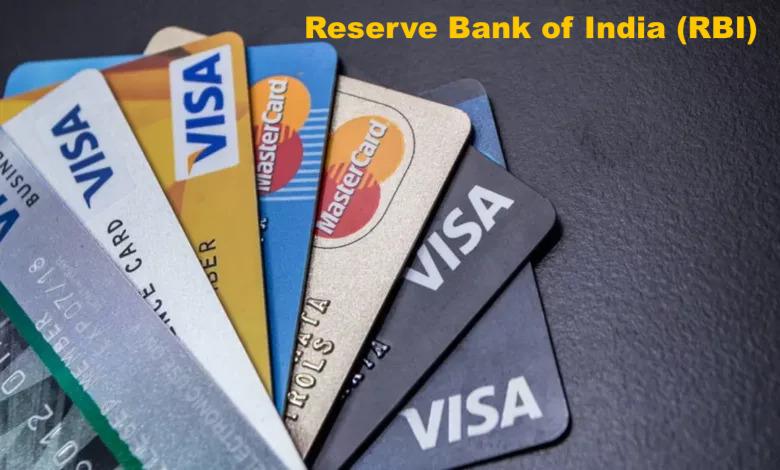
- 17 Feb 2024
Why is it in the News?
The Reserve Bank of India (RBI) has ordered a certain card network to stop “unauthorised payments” made using business cards.
What is a Card Network?
- Card networks connect banks, merchants, and customers (card users) to one another so that transactions can be carried out smoothly and securely.
- Card networks are operating in the background every time a customer uses her card to make a payment.
- There are five authorised card networks in India:
- Visa
- Mastercard
- RuPay
- Diners Club, and
- American Express
Reasons Behind the RBI Order:
- Payments to Non-Card-Accepting Entities: The network facilitated card payments from corporations for commercial transactions, transferring the funds to non-card-accepting recipients via IMPS, RTGS, or NEFT without proper authorization, violating the Payment and Settlement Systems (PSS) Act, 2007.
- Non-Adherence to KYC Requirements: Additionally, the RBI expressed concerns regarding non-compliance with Know Your Customer (KYC) norms in these transactions.
What are the RBI’s Concerns?
- Under Section 4 of the PSS Act, such a payment system requires authorisation, which had not been obtained in this case.
- There were two other concerns as well.
- First, the intermediary in such an arrangement pooled a large amount of funds into an account that was not a designated account under the PSS Act.
- Second, transactions processed under this arrangement did not comply with the ‘originator and beneficiary information’ requirements, as stipulated under the ‘Master Direction on KYC’ issued by the RBI.
- Steps taken by the RBI: The RBI has instructed the card network to suspend all such arrangements until further notice.
- However, regular usage of business credit cards remains unaffected.
Stratospheric Observatory for Infrared Astronomy (SOFIA) (Indian Express)

- 17 Feb 2024
Why is it in the News?
Researchers have now, for the first time, detected the presence of water molecules on the surface of an asteroid using the data from NASA's now-retired SOFIA airborne observatory.
About Stratospheric Observatory for Infrared Astronomy (SOFIA):
- SOFIA is a powerful, general-purpose infrared observatory used to study the birth of new stars, planetary nebulae and supernova remnants, the atmospheres of Solar System objects, and many more.
- Earth’s atmosphere protects us from harmful radiation, but it also blocks a lot of light useful for astronomy.
- For that reason, NASA and the German Aerospace Center (DLR) built the Stratospheric Observatory for Infrared Astronomy (SOFIA) to fly aboard a modified commercial aircraft capable of flying above 99% of the light-blocking atmosphere.
- SOFIA is carried aboard an aeroplane capable of flying at an altitude of 13 kilometres, higher than 99% of the infrared-absorbing atmosphere.
- First flown in 2007, SOFIA provided the first measurements of Pluto’s atmosphere, mapped the dust and magnetic fields around black holes, and provided a wealth of information about star-forming nebulae.
- The telescope consists of a 2.5-meter (8.2-foot) mirror and a suite of scientific instruments including:
- Photometers to measure the brightness of sources
- Spectrometers to split the light into its component wavelengths, and
- A polarimeter to measure the polarisation of light caused by dust particles.
- Astronomer Gerard Kuiper is best known for his prediction of the Kuiper Belt of icy outer Solar System bodies, but in 1965, he used a high-flying NASA aeroplane to study Venus in infrared light, pioneering the use of aircraft for astronomy.
- SOFIA is Kuiper’s spiritual descendant, built on a larger scale and using a dedicated aeroplane.
- The SOFIA telescope is carried by a Boeing 747SP (“special purpose”) designed for long-duration flights.
- The aeroplane was modified in several ways, including a large opening on the side of the telescope.
- To operate under these conditions, SOFIA is lightweight and built to withstand mechanical vibrations and turbulence from air flowing across the opening in the side of the aeroplane.
- The aeroplane is capable of ten-hour flights, with flight paths chosen to keep ahead of the sunrise and maximise the amount of darkness.
- SOFIA achieved full operational capability in 2014 and prematurely ended in 2022 after operating for 12 years.
India initiates Anti-Dumping Probe into Solar Glass Imports from China and Vietnam (TOI)
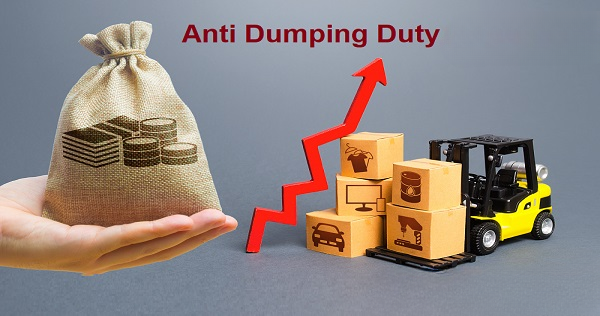
- 17 Feb 2024
Why is it in the News?
India has launched an anti-dumping investigation into the import of solar glass from China and Vietnam following a complaint from domestic players.
What is Anti-Dumping Duty?
- Anti-dumping duty is a tariff levied on imports from foreign countries when their prices are lower than the fair market value of similar goods in the domestic market.
- It's implemented by governments to counteract the practice of "dumping," where foreign goods are sold at unfairly low prices in the domestic market, posing a threat to local businesses.
- The primary objective of anti-dumping duty is to safeguard domestic industries from unfair competition and restore fair trade practices.
- This measure is permitted by the World Trade Organization (WTO) to address instances where dumping causes genuine harm to domestic industries.
- To impose anti-dumping duties, governments must provide evidence of dumping, quantify its extent in terms of costs, and demonstrate the resulting injury or threat to domestic markets.
- While aimed at protecting local industries, anti-dumping duties can sometimes lead to increased prices for consumers within the country.
About Countervailing Duty (CVD):
- Countervailing duty (CVD) is a type of tariff imposed by a government to offset the adverse effects of import subsidies on domestic producers.
- It serves as an import tax applied by the importing country on subsidised products from abroad.
- CVD is imposed to address situations where foreign governments provide subsidies to their producers, lowering the cost of their goods and potentially disrupting fair competition.
- To prevent the influx of subsidised products into their markets, importing countries levy CVD, effectively neutralising the price advantage enjoyed by these imports.
- The imposition of CVD is permitted by the World Trade Organization (WTO) to help maintain fair trade practices among its member countries.
Difference Between Anti-dumping Duty and Countervailing Duty:
- Anti-dumping duty is enacted to safeguard domestic markets from the harmful effects of low-priced foreign goods, while CVD targets products benefiting from government subsidies, resulting in artificially low prices.
- The amount of Anti-dumping duty is determined by the margin of dumping, whereas CVD is calculated based on the subsidy value granted to foreign goods.
Melting Glaciers Threaten Gulf Stream Collapse by 2025 (India Today)
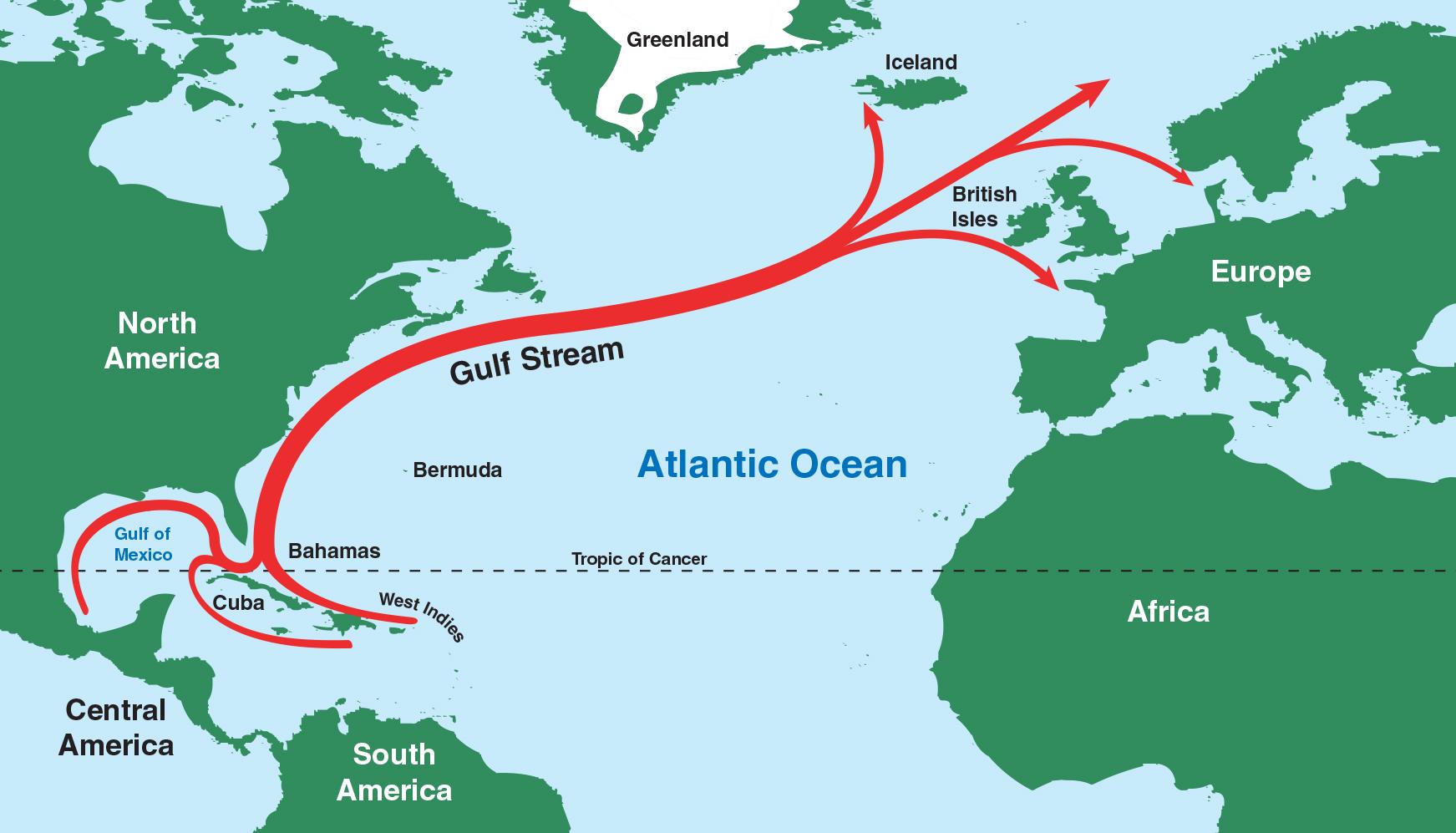
- 16 Feb 2024
Why is it in the News?
As the world grapples with the escalating impacts of climate change, a recent study has sounded the alarm on the potential collapse of the Gulf Stream by 2025.
What is the Gulf Stream?
- The Gulf Stream is a strong ocean current that brings warm water from the Gulf of Mexico into the Atlantic Ocean.
- It extends all the way up the eastern coast of the United States and Canada.
What Causes the Gulf Stream?
- The Gulf Stream is caused by a large system of circular currents and powerful winds, called an oceanic gyre.
- There are five oceanic gyres on Earth.
- The Gulf Stream is part of the North Atlantic Subtropical Gyre.
- The ocean is constantly in motion, moving water from place to place via currents.
- The Gulf Stream brings warm water from the Gulf of Mexico all the way up to the Norwegian Sea.
- As the warm water comes in, colder, denser water sinks and begins moving south—eventually flowing along the bottom of the ocean all the way to Antarctica.
How Does the Gulf Stream Impact Weather and Climate?
- This strong current of warm water influences the climate of the east coast of Florida, keeping temperatures there warmer in the winter and cooler in the summer than the other southeastern states.
- Since the Gulf Stream also extends toward Europe, it warms Western European countries as well.
- In fact, England is about the same distance from the equator as the cold regions of Canada, yet England enjoys a much warmer climate.
- If it weren’t for the warm water of the Gulf Stream, England would have a much colder climate.
How Long Have We Known About the Gulf Stream?
- We’ve known about the Gulf Stream for more than 500 years.
- In 1513, Spanish explorer Ponce de Leon noted that there was a strong current in this location.
- A few years later, Ponce de Leon’s ship pilot realized that the Gulf Stream could help speed up the sailing trip from Mexico to Spain.
- In the late 18th century, Benjamin Franklin became the first to chart out the path of the Gulf Stream on a map.
Coal Ministry Hosts Industry Interaction on Coal Gasification (ET)
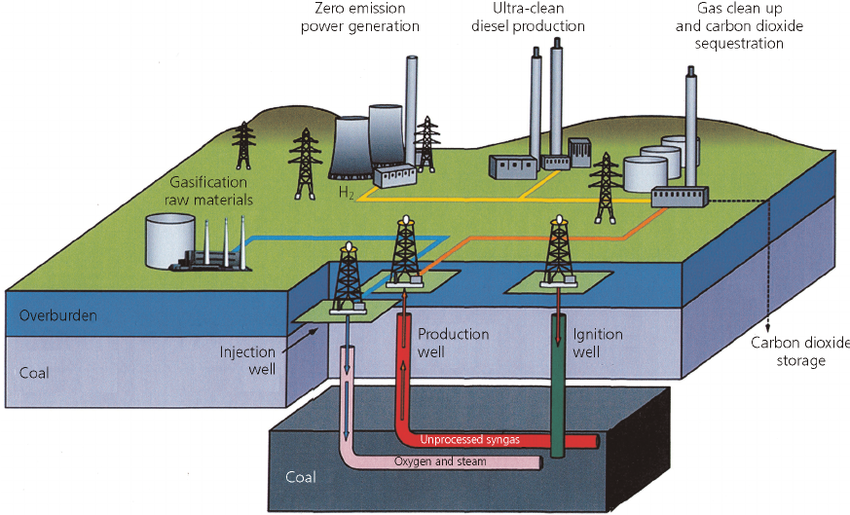
- 16 Feb 2024
Why is it in the News?
The Ministry of Coal has announced it will host an Industry Interaction on February 16, 2024, in Hyderabad to discuss the development of coal and lignite gasification projects across India.
What is Coal Gasification?
- Coal gasification is a process where coal undergoes partial oxidation with air, oxygen, steam, or carbon dioxide to produce a fuel gas.
- This gas serves as an alternative to piped natural gas or methane for energy generation.
- Underground Coal Gasification (UCG) is a technique involving the conversion of coal into gas within the seam, extracted through wells.
- Production of Syngas: This process yields Syngas, a mixture primarily comprising methane (CH4), carbon monoxide (CO), hydrogen (H2), carbon dioxide (CO2), and water vapour (H2O).
- Syngas finds applications in producing fertilisers, fuels, solvents, and synthetic materials.
- Significance: In manufacturing, steel companies traditionally rely on costly imported coking coal. Syngas derived from coal gasification offers a cost-effective alternative.
- It is utilized in electricity generation, chemical feedstock production, and hydrogen-based applications like ammonia production and fueling a hydrogen economy.
Advantages of Coal Gasification:
- Coal gasification offers a solution to local pollution issues.
- It is deemed environmentally cleaner than direct coal combustion.
- Decreasing dependence on imported natural gas, methanol, ammonia, and other vital commodities, enhances energy security.
- This technology has the potential to mitigate environmental impacts by curbing carbon emissions and promoting sustainable approaches, aligning with India's global objectives for a more environmentally sustainable future.
Concerns Associated with Coal Gasification Plants?
- The main disadvantage of coal gasification is that it is an expensive process.
- The process can produce a number of harmful emissions, including carbon dioxide, sulphur dioxide, nitrogen oxides, and mercury.
- The process produces a lot of ash, which can pollute the environment.
- The process uses a lot of water, which can lead to water shortages in areas where it is used.
The Global Pulses Conference (The Hindu)
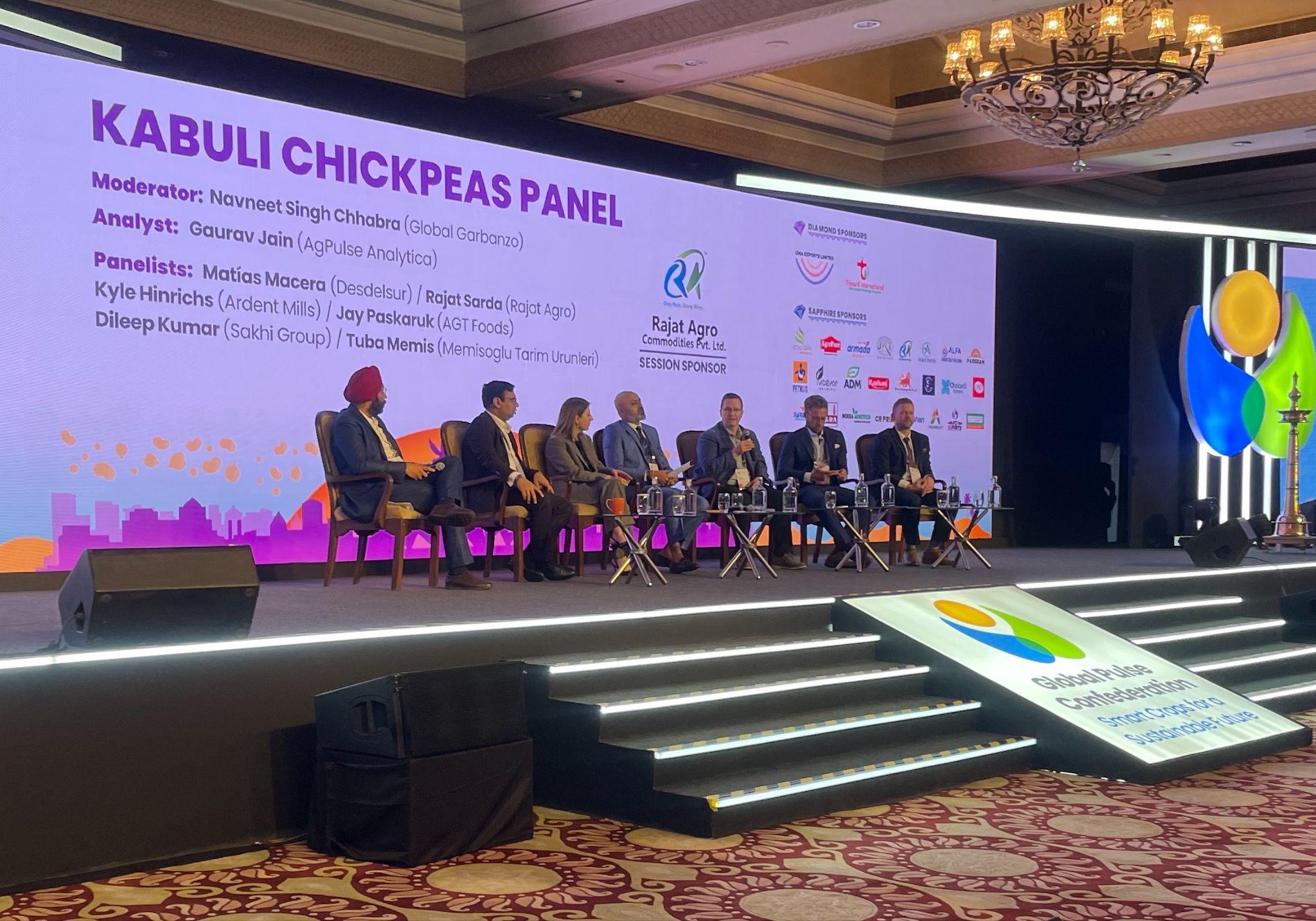
- 16 Feb 2024
Why is it in the News?
The Global Pulses Conference, an annual meeting of pulses producers, processors and traders, suggested that India augment the production of pulses to meet the nutritional requirements.
About the Global Pulses Confederation (GPC):
- The Global Pulses Confederation (GPC) serves as a global representative body for the pulse industry.
- Stakeholders: It encompasses various stakeholders within the pulse industry, such as growers, researchers, traders, government entities, processors, and consumers.
- Headquarters: The GPC is based in Dubai and operates under the licensing of the Dubai Multi Commodity Centre (DMCC).
- The Global Pulses Conference, held annually, took place in New Delhi this year.
Key Observations from the Conference:
- Self-Sufficiency Target: India aims to achieve self-sufficiency in pulses production by 2027, having already attained this status in chickpeas and various other pulse crops, with minor gaps remaining in pigeon peas and black gram.
- Decadal Growth: Pulse production has witnessed a significant 60% growth, increasing from 171 lakh tonnes in 2014 to 270 lakh tonnes in 2024.
- Minimum Support Price (MSP): The government has guaranteed farmers a minimum support price set at 50% above the actual cost of production, ensuring lucrative returns on investment.
- Current MSP rates reflect remarkable increases, such as 117% in masoor, 90% in moong, and substantial hikes in chana dal, toor, and urad compared to a decade ago.
- Government Initiatives: Efforts include the introduction of new seed varieties and the expansion of tur and black gram cultivation to bolster production.
- Importance of Pulse Crops: Pulse cultivation not only enriches soil health but also provides nutritional benefits, particularly for smallholding farmers.
- Improved cultivation practices promise widespread benefits for all stakeholders involved.
Status of Pulse Production in India:
- Production Trends: Over the past decade, pulse production in India has surged by 60%, escalating from 171 lakh tonnes in 2014 to 270 lakh tonnes in 2024.
- Global Standing: India boasts the distinction of being the world's largest producer, consumer, and importer of pulses. It contributes 25% to global production, consumes 27% of the world's total, and imports 14%.
- Agricultural Landscape: Pulses occupy approximately 20% of the foodgrain area in India and contribute 7-10% to the nation's total foodgrain production.
- Cultivation Seasons: While pulses are cultivated in both Kharif and Rabi seasons, Rabi pulses account for over 60% of the total production.
- Variety Distribution: Among pulse varieties, Gram leads the production, comprising roughly 40% of the total output, followed by Tur/Arhar at 15-20%, and Urad/Black Matpe and Moong each contributing approximately 8-10%.
- Self-Sufficiency: India has achieved self-sufficiency in chickpeas (chana) and various other pulse crops, with minor shortfalls, observed only in pigeon peas (tur) and black gram.
DoT Unveils 'Sangam: Digital Twin' Initiative (TOI)
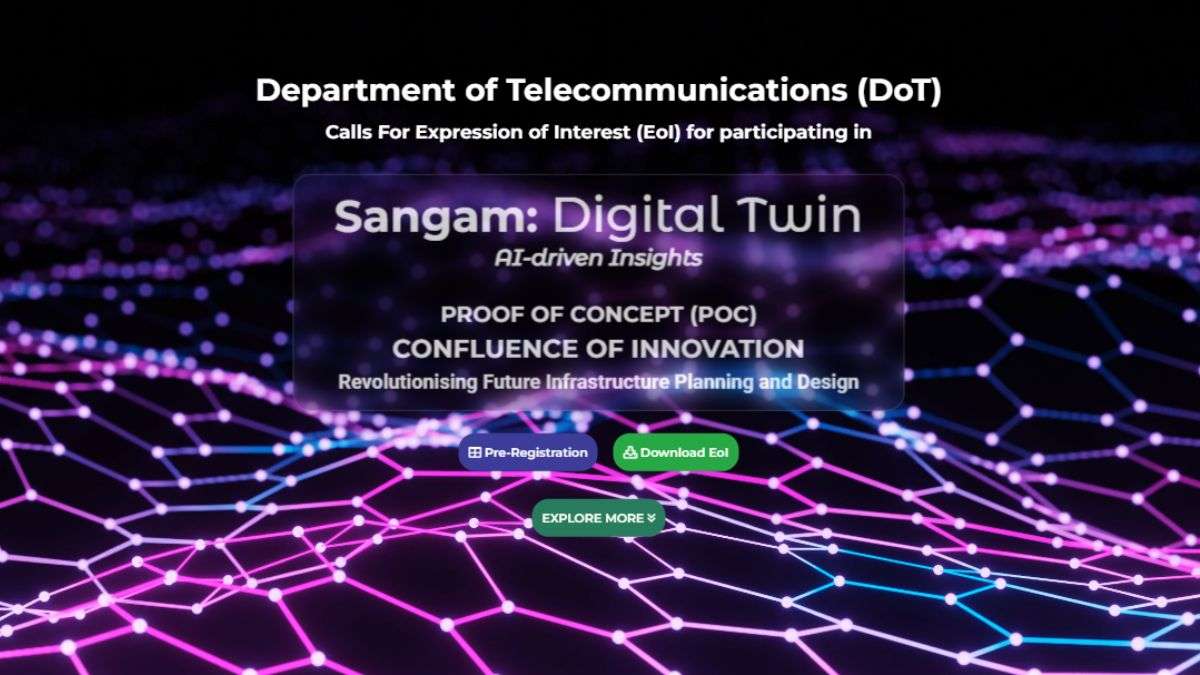
- 16 Feb 2024
Why is it in the News?
The Department of Telecommunications has introduced the 'Sangam: Digital Twin' initiative, which aims to transform infrastructure planning and design through innovation and the integration of advanced technologies.
What is Sangam: Digital Twin initiative?
- Digital Twin technology creates virtual replicas of physical assets, enabling monitoring, simulation, and analysis for adaptive outcomes.
- 'Sangam: Digital Twin' consists of two stages:
- The first is exploratory for creative exploration, and
- The second is for the practical demonstration of specific use cases, creating a future blueprint for collaboration in future infrastructure projects.
- The initiative aligns with advancements in communication, computation and sensing over the past decade, fostering a collaborative approach to reshape infrastructure planning and design.
- 'Sangam: Digital Twin' integrates 5G, IoT, AI, AR/VR, AI native 6G, Digital Twin and next-gen computational technologies to break silos and promote a whole-of-nation approach.
- The new initiative aims to transform ideas into solutions, bridging the gap between conceptualisation and realisation, and fostering advancements in infrastructure.
- Sangam encourages a holistic approach to innovation, uniting stakeholders to harness unified data and collective intelligence.
- It is aimed at creating an ecosystem that maximises the value of technological advancements for development.
- Sangam aims to demonstrate the practical implementation of innovative infrastructure planning solutions, providing a model framework for collaboration and a future blueprint for scaling successful strategies in future projects.
- The platform also offers a blog for pre-registered participants to connect, share insights, and engage in discussions.
Significance of Digital Twins:
- Facilitates remote monitoring, making it applicable for use in hazardous operations.
- Enhances predictive capabilities, assisting in making informed policy decisions.
- Improves operational efficiency, thereby ensuring the maintenance of output quality.
- Assists in urban planning by generating various simulations and forecasts.
8th Century Kotravai Sculpture from Pallava Period Discovered (Indian Express)
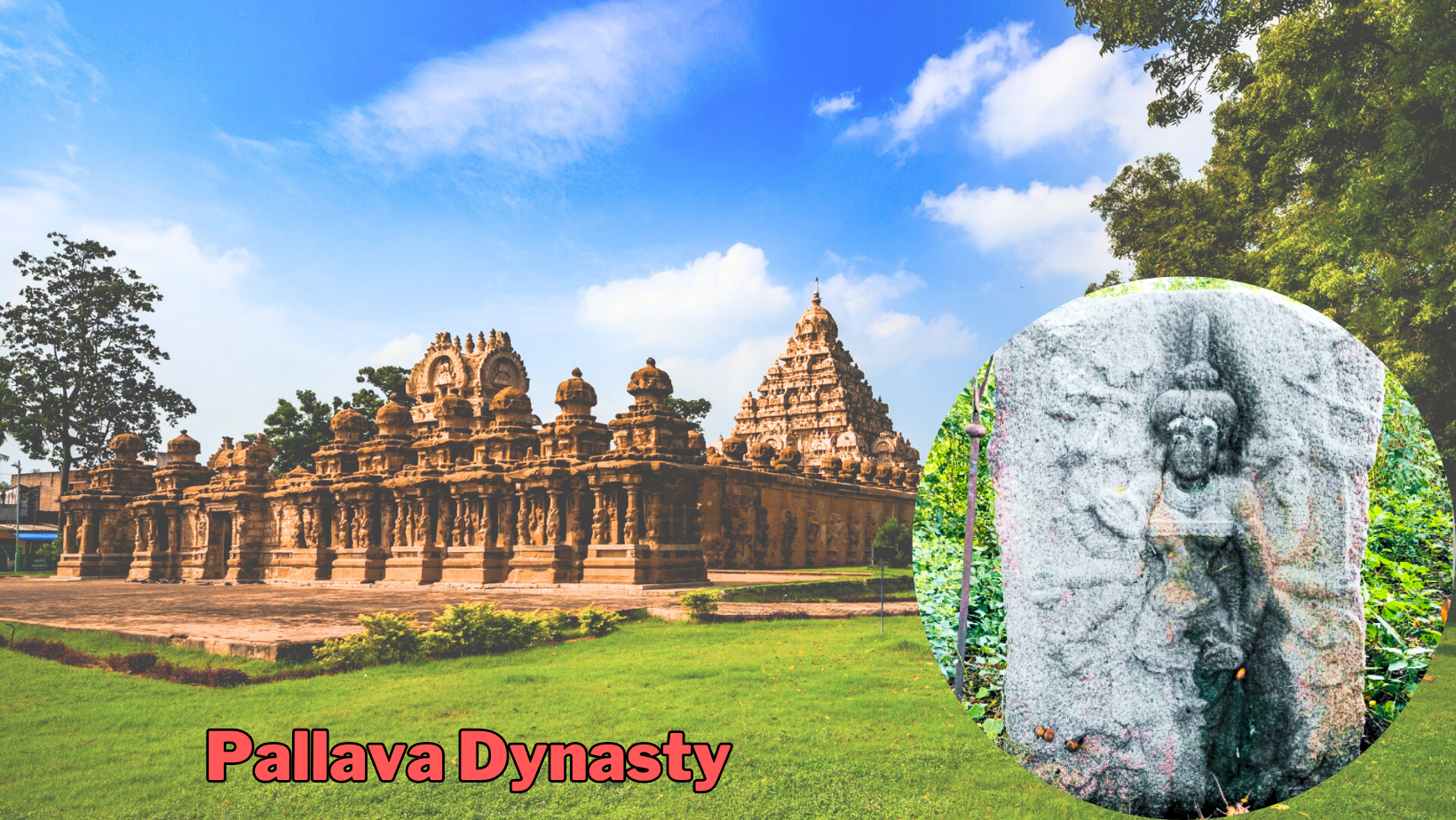
- 15 Feb 2024
Why is it in the News?
Recently, archaeologists discovered an eighth-century Kotravai sculpture, an artefact that dates back to the Pallava period, near Ulundurpet, Tamil Nadu.
About the Kotravai Sculpture:
- Kotravai sculpture is made in a slab stone of five-feet height and four-feet width.
- The idol is depicted with eight hands, indicating its origin in the eighth century during the Pallava period.
- The sculpture depicts various elements such as chakkara, sword, bell, and abhaya mudra in the right hands.
- Conch, bow, shield, and Uru Mudhra are shown in the left side hands along with bangles in all hands.
- The presence of trishul (soolam) and lion (simmam) on the right side of head, and blackbuck (kavarimann) on the left side.
- Kotravai is portrayed standing on the head of a buffalo, with two guards on each side.
About the Pallava Dynasty:
- The Pallava Dynasty, a prominent power in South India, thrived from the 3rd to the 9th centuries.
- Their dominion encompassed the northern regions of Tamil Nadu, portions of Karnataka, Andhra Pradesh, and Telangana, with Kanchipuram serving as their capital.
- The Pallavas were known for their patronage of Buddhism, Jainism, and Brahminical faith, as well as their support for music, painting, and literature.
- Origins: Initially vassals of the Andhra Satavahanas, the Pallavas gained autonomy following the latter's decline in Amaravati.
- Gradually expanding southward, they established their capital in Kanchipuram during the 4th century CE.
- Under the reigns of Mahendravarman I (571 - 630 CE) and Narasimhavarman I (630 - 668 CE), the Pallava realm experienced significant growth in wealth and power.
- According to the accounts of Chinese traveller Hiuen Tsang, Bodhidharma, the founder of the Chan (Zen) school of Buddhism in China, was purportedly a prince of the Pallava empire.
- The Chinese traveller Hiuen Tsang visited Kanchipuram, the capital of Pallavas, during the reign of Narasimha Varman I and lauded their benevolent governance.
Architectural Contributions of the Pallavas:
- The Pallava Dynasty is renowned for its patronage of Dravidian architecture, particularly temple construction.
- They played a pivotal role in the evolution from rock-cut architecture to stone temples.
- Their most celebrated architectural achievements can be found in Mahabalipuram, which flourished as a significant hub of art, architecture, and literature during Pallava rule.
- Narasimhavarman II commissioned notable structures such as the Kailasanatha Temple in Kanchipuram and the Shore Temple.
- Among these temples, Kailasanatha and Vaikuntaperumal stand out for their architectural excellence.
- The Vaikuntaperumal shrine, erected in the 8th century AD, is renowned for its intricate sculptures depicting Pallava history.
- Religion: The Pallavas embraced Shaivism, a predominant local religion, thereby aligning themselves with Dravidian cultural traditions.
Military Engagements and Decline of the Pallava Dynasty:
- Throughout their reign, the Pallavas engaged in persistent conflicts with both the Chalukya Dynasty to the north and the Tamil kingdoms of Chola and Pandyas to the south.
- The Pallavas faced ongoing battles with the Chalukyas of Badami and ultimately succumbed to the supremacy of the Chola kings in the 8th century CE.
- The ascent of the Rashtrakutas marked the decline of the Pallava Dynasty.
- In 897 AD, Vijayalaya, the Chola King, decisively defeated Aparajitavarman, the last Pallava King, thereby sealing the fate of the Pallava Dynasty.
Alaskapox Claims One Life in US (TOI)
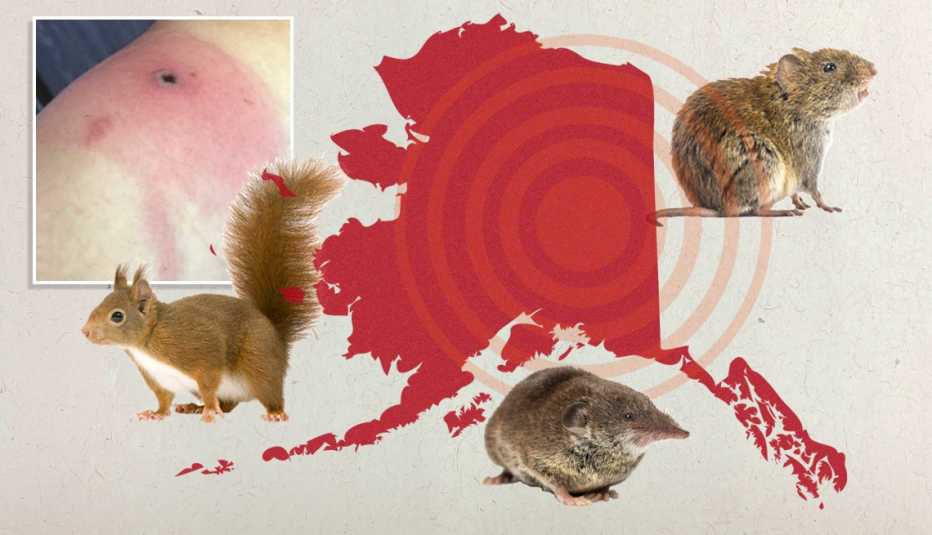
- 15 Feb 2024
Why is it in the News?
An elderly man has died from Alaskapox, the first known fatality from the recently discovered virus.
What is Alaskapox?
- Alaskapox is caused by orthopoxvirus, a family of brick-shaped viruses that can infect both animals and humans, leading to skin lesions or pox.
- The virus was first identified in a woman living near Fairbanks, Alaska, and has since been primarily detected in small mammals like red-backed voles and shrews.
- However, domestic pets such as dogs and cats may also be carriers of the virus.
What are the symptoms of Alaskapox?
- Symptoms of Alaskapox include the development of one or more bumps or pustules on the skin, accompanied by joint or muscle pain and swollen lymph nodes.
- While the majority of the seven known human cases in Alaska over the past nine years have experienced mild illnesses that were resolved without intervention, the virus poses a greater threat to individuals with weakened immune systems.
How is Alaskapox Transmitted?
- Transmission of Alaskapox is believed to occur through direct contact with infected animals.
- Unlike some of its orthopoxvirus relatives, there have been no documented instances of Alaskapox spreading from person to person.
- Though it's not clear how Alaskapox is transmitted, researchers say that it may be zoonotic meaning it can jump from animals to humans.
PM Modi addresses World Government Summit 2024 in Dubai (MEA)
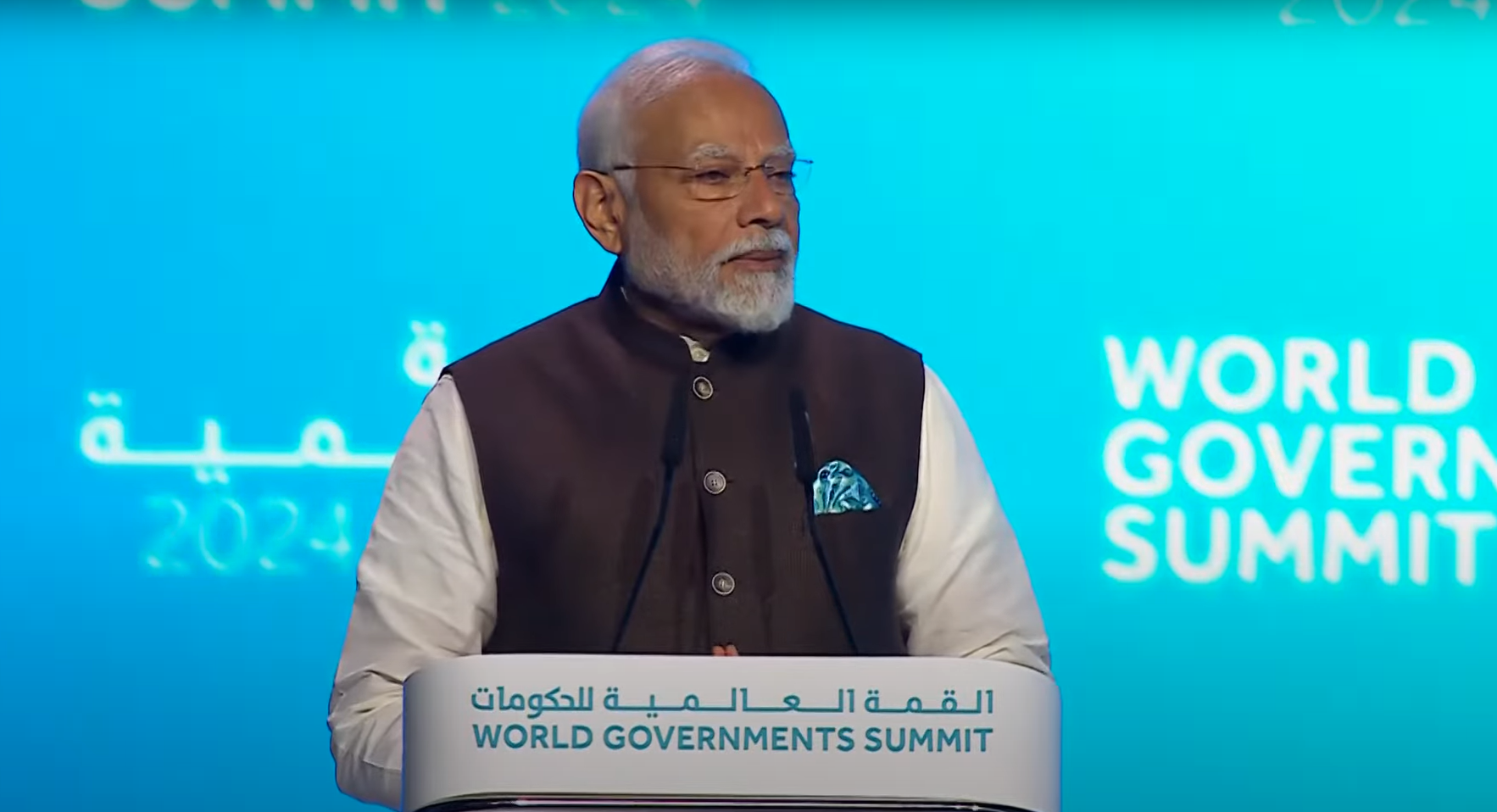
- 15 Feb 2024
Why is it in the News?
Prime Minister Modi attended the World Government Summit 2024 as guest of honour in Dubai recently.
What is the World Governments Summit?
- The World Governance Summit serves as a worldwide platform committed to shaping the trajectory of government initiatives across the globe.
- This annual gathering takes place in Dubai, United Arab Emirates, convening leaders and experts from various sectors.
- Each year, the Summit sets the agenda for the forthcoming era of governance, emphasising the utilisation of innovation and technology to address pressing global challenges.
- Since its establishment in 2013, the Summit has been steadfast in its mission to influence the evolution of governmental practices and foster a brighter future for humanity.
World Governance Summit Organization:
- The World Governance Summit Organization operates as an impartial, nonprofit entity with a global reach, dedicated to influencing the future landscape of governance.
- Headquartered in Dubai, United Arab Emirates, the organisation serves as a nexus for collaboration and idea exchange among governmental and non-governmental stakeholders.
- 2024 Summit: Dubai, United Arab Emirates
- Theme - 'Shaping Future Governments'
Key Highlights of PM Modi's Speech:
- Streamlining Government Operations: The Prime Minister addressed the evolving landscape of governance, emphasising India's adoption of transformative reforms under the ethos of "Minimum Government, Maximum Governance.”
- Human-Centred Governance: Drawing from India's experience leveraging digital technology for welfare, inclusivity, and sustainability, he advocated for a human-centred approach to governance.
- He highlighted India's focus on people's participation, last-mile delivery, and women-led development to foster an inclusive society.
- Need for Global Collaboration: Given the interconnected nature of the world, the Prime Minister stressed the importance of governments collaborating and learning from each other to tackle future challenges effectively.
- Model of Governance: Highlighting the current imperative, the Prime Minister underscored the necessity for governance to be inclusive, technologically adept, transparent, and environmentally sustainable.
- He outlined priorities such as Ease of Living, Justice, Mobility, Innovation, and Business in public service delivery.
- India's Climate Change Commitment: Reaffirming India's unwavering commitment to climate change action, he urged people to join Mission LiFE (Lifestyle for Environment) to foster a sustainable world.
- Leadership Role of India: The Prime Minister elaborated on India's leadership role, particularly as the chair of G-20, highlighting efforts to address global challenges and elevate development concerns of the Global South.
- He advocated for reforming multilateral institutions to give greater voice to the Global South in decision-making processes.
- India as a Global Partner: Emphasising India's commitment to global progress, he reiterated India's role as a "Vishwa Bandhu" (friend of the world), pledging continued contributions to global advancement.
China Moves its Nationals into its Vacant ‘Defence Villages’ Along LAC (Indian Express)
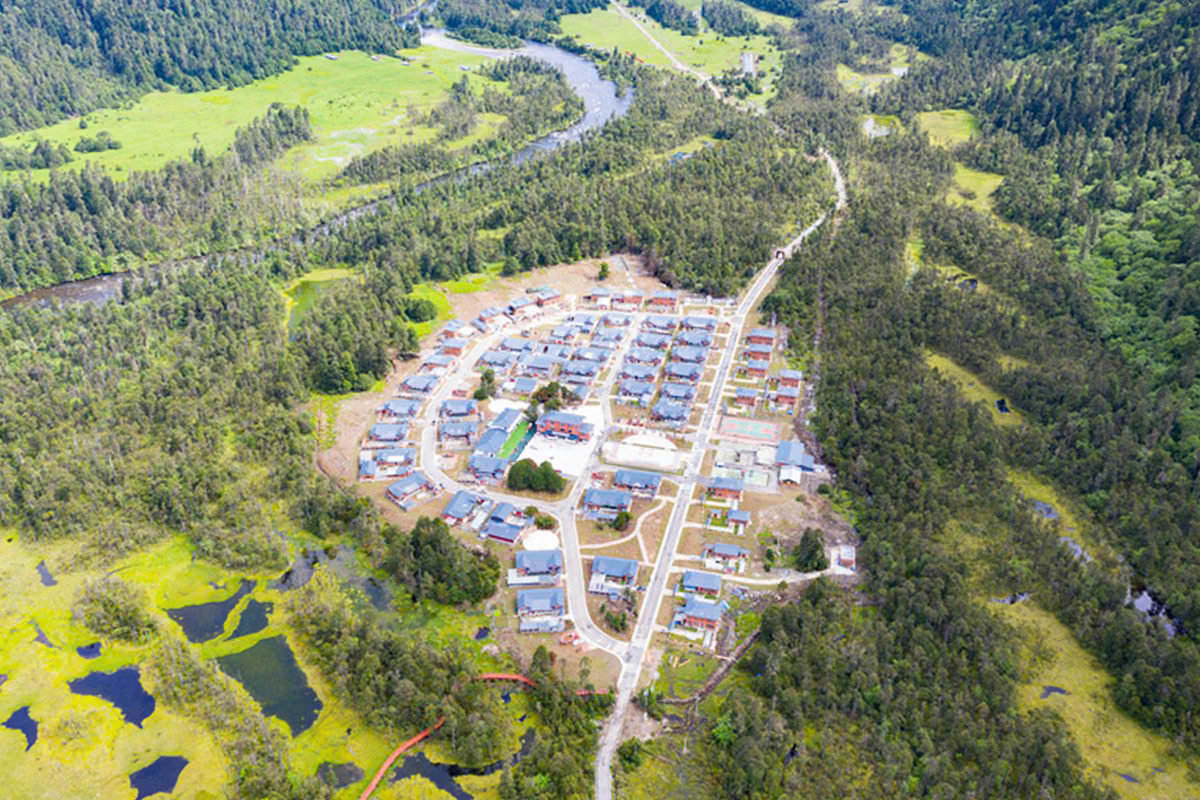
- 15 Feb 2024
Why is it in the News?
Chinese nationals have started occupying several of their model “Xiaokang” border defence villages across India’s north-eastern borders which the country has been building along the Line of Actual Control (LAC) since 2019.
News Summary:
- Chinese activity has been observed in several villages situated on its side of the Line of Actual Control (LAC) opposite the Lohit Valley and the Tawang sector of Arunachal Pradesh.
- Over the past five years, China has been undertaking the construction of 628 "well-off villages" along India's borders with the Tibet Autonomous Region, encompassing regions like Ladakh and Arunachal Pradesh.
- The precise purpose of these villages remains ambiguous, although the structures are believed to serve as "dual-use infrastructure," serving both civilian and military functions.
What is the Line of Actual Control (LAC)?
- The LAC serves as the boundary separating areas under Indian administration from those under Chinese administration.
- However, it is not a formally agreed-upon boundary, lacking delineation on maps or physical demarcation on the ground.
- India views the LAC as approximately 3,488 km in length, while China's perspective estimates it to be around 2,000 km.
- The LAC is segmented into three sectors: the eastern sector covering Arunachal Pradesh and Sikkim, the middle sector spanning Uttarakhand and Himachal Pradesh, and the western sector in Ladakh.
- India's official boundary line, as depicted on maps released by the Survey of India, encompasses both Aksai Chin and Gilgit-Baltistan, diverging from the LAC.
- Consequently, the LAC does not coincide with India's claim line.
- For China, the LAC generally aligns with its claim line, except in the eastern sector, where it asserts control over the entire territory of Arunachal Pradesh, which it regards as South Tibet.
Dispute over the LAC and Controversy Surrounding Claim Lines in Ladakh:
- India disputes the validity of the Line of Actual Control (LAC), asserting that it is a construct devised by China.
- The Chinese demarcation appears as a series of disconnected points on a map, lacking a clear and consistent delineation.
- India contends that the line should exclude territorial gains made through aggression in 1962 and instead reflect the positions as of September 8, 1962, before the Chinese incursion.
- This ambiguity in the Chinese definition of the LAC leaves room for China to pursue incremental changes on the ground through military actions, as evidenced by the clash in the Galwan Valley between the Indian Army and the Chinese PLA in 2020.
- Aksai Chin, located in the Ladakh region of the princely state of Jammu and Kashmir, was not part of British India, despite being under British Empire control.
- As a result, while the eastern boundary was clearly defined in 1914 with the signing of the Shimla Agreement on the McMahon Line by British India, the western boundary in Ladakh remained unresolved.
- These historical maps, still officially recognized today, formed the basis of engagements with China, ultimately culminating in the 1962 War.
Infrastructure Development along the LAC:
- Consistently, China has enhanced its existing infrastructure along the Line of Actual Control (LAC), focusing on improving connectivity through mountain passes, constructing roads, bridges, and model villages.
- Additionally, China has been constructing infrastructure, including border villages, within Bhutanese territory.
- Over the past three to four years, India has intensified efforts to bolster its border infrastructure, encompassing initiatives to enhance forward connectivity, establish alternative routes to the LAC, and connect remote areas.
- India's Vibrant Villages program aims to modernise 663 border villages, providing them with essential amenities in the initial phase.
- Notably, 17 of these villages located along the borders with China in Ladakh, Himachal Pradesh, Uttarakhand, Sikkim, and Arunachal Pradesh have been earmarked for development as pilot projects under this program.
- Moreover, significant progress is underway on three major highways in Arunachal Pradesh:
- The Trans-Arunachal Highway
- The Frontier Highway, and
- The East-West Industrial Corridor Highway.
Stone Age Wall Discovered Beneath the Baltic Sea (India Today)
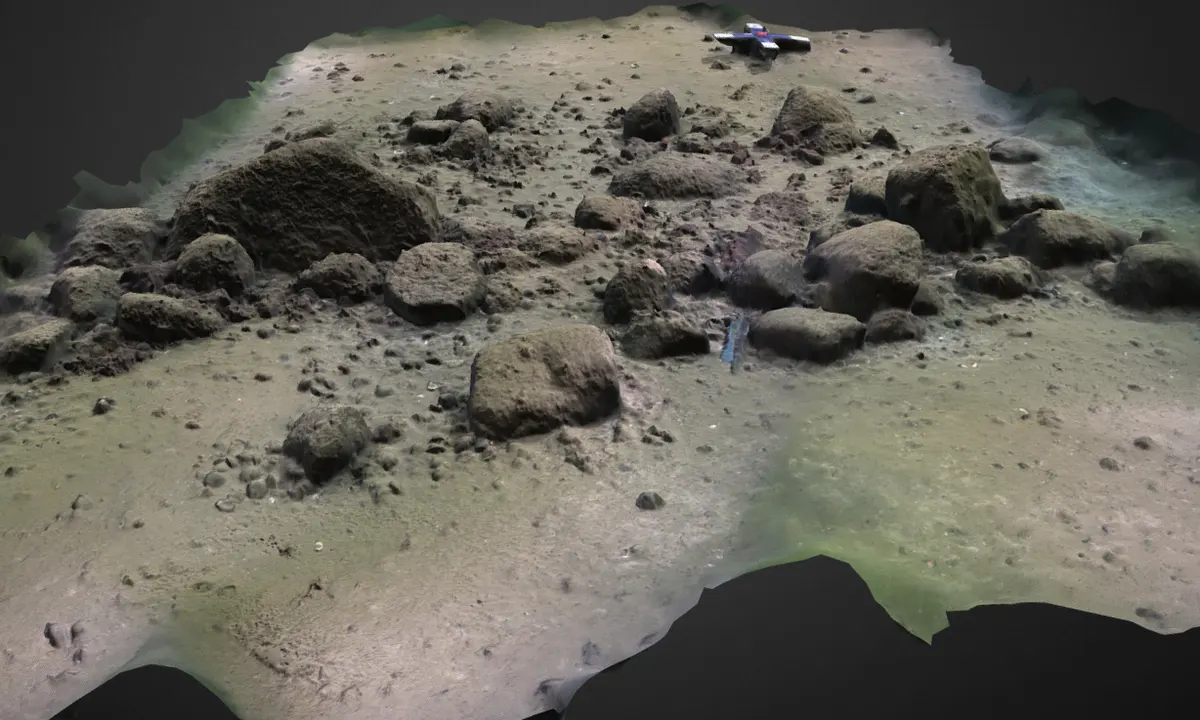
- 15 Feb 2024
Why is it in the News?
A megastructure found in the Baltic Sea may represent one of the oldest known hunting structures used in the Stone Age — and could change what’s known about how hunter-gatherers lived around 11,000 years ago.
About the Blinkerwall:
- The Blinkerwall is the oldest known megastructure crafted by humans in Europe.
- It is around a kilometre-long structure that lies hidden in the Bay of Mecklenburg, submerged under 21 metres of water.
- It consists of approximately 1,400 smaller stones intricately positioned to connect almost 300 larger boulders, some of which were deemed too massive for human groups to have manoeuvred.
- The total weight of the wall's stones exceeds 142 tonnes, making it improbable that natural processes, such as tsunamis or glacial movements, formed it.
- It likely dates back over 10,000 years, sinking beneath rising sea levels around 8,500 years ago.
- This positions it among the oldest known examples of hunting architecture globally and potentially designates it as the oldest man-made megastructure in Europe.
About the Baltic Sea:
- The Baltic Sea is a semi-enclosed inland sea situated in Northern Europe.
- As an arm of the North Atlantic Ocean, it stretches northward from the latitude of southern Denmark nearly to the Arctic Circle, acting as a divider between the Scandinavian Peninsula and the rest of continental Europe.
- With a coastline spanning approximately 8,000 km, the Baltic Sea is bordered by several countries, including Sweden, Poland, Lithuania, Latvia, Finland, Estonia, Germany, Denmark, and Russia.
- Covering an area of around 377,000 sq.km, the sea measures approximately 1,600 km in length and 193 km in width.
- It is linked to the White Sea via the White Sea Canal and to the North Sea's German Bight through the Kiel Canal, while it connects to the Atlantic Ocean through the Danish Straits.
- The Baltic Sea encompasses three significant gulfs: the Gulf of Bothnia to the north, the Gulf of Finland to the east, and the Gulf of Riga slightly to the south.
- Renowned as the world's largest brackish inland water body, the Baltic Sea exhibits lower water salinity levels compared to the World Oceans due to freshwater influx from the surrounding land and its shallow depth.
- More than 250 rivers and streams discharge into the Baltic Sea, with the Neva River being the largest among them.
- The sea boasts over 20 islands and archipelagos, with Gotland, located off the coast of Sweden, ranking as the largest island in the Baltic Sea.
Farmers’ Protest 2.0 and MSP Demand (The Hindu)

- 14 Feb 2024
Why is it in the News?
India's Farmers are back on the streets yet again, demanding guarantees on Minimum Support Prices, work on the Swaminathan Committee report, Electricity amendment bill, and debt waiver.
Why are Farmers Protesting?
- Farmers have demanded MSP assurance across all crops, implementing Swaminathan Commission recommendations, debt relief, pensions for farmers, and withdrawing cases against past protestors.
- Advocacy for India's exit from WTO and free-trade agreements are also demands that have been put forth by the farmers.
What is the Minimum Support Price (MSP)?
- Minimum Support Price (MSP) is the lowest rate at which government procurement agencies buy crops from farmers.
- It shields farmers from market fluctuations, offering stability and income security.
- MSP is crucial for ensuring fair prices for farmers and is determined by the Commission for Agricultural Costs and Prices (CACP), considering factors like production costs, market trends, and demand-supply dynamics.
- Established in 1965, CACP operates under the Ministry of Agriculture and Farmers Welfare.
- After the CACP submits its recommendations, the Cabinet Committee on Economic Affairs (CCEA), chaired by the Prime Minister of India, makes the final decision on MSP levels.
Which Crops are Covered Under MSP?
- Kharif crops such as Paddy, Jowar, Bajra, Ragi, Maize, Arhar, Moong, Urad, Cotton, Groundnut, Sunflower Seed, Soybean, and Sesamum.
- Rabi crops such as Wheat, Barley, Gram, Masur, Rapeseeds & Mustard, Safflower, and Toria.
- Additionally, MSP is announced for Copra, De-husked Coconut, and Jute, and Fair Remunerative Prices are declared for Sugarcane.
How is MSP Calculated?
- The Minimum Support Price (MSP) is calculated by considering both the explicit and implicit costs incurred by farmers.
- Explicit costs cover expenses like chemicals, fertilisers, seeds, and hired labour, while implicit costs include factors such as family labour and rent.
- These variables are represented by A2, FL, and C2.
- A2 refers to the expenses for inputs like chemicals, fertilisers, seeds, and hired labour for crop growth, production, and maintenance.
- A2 + FL includes both actual and implicit costs, such as family labour.
- C2 incorporates A2 + FL along with fixed capital assets and rent paid by farmers.
- Additionally, the Commission for Agricultural Costs and Prices (CACP) takes into account various other factors:
- Cost of cultivation per hectare and crop costs in different regions.
- Cost of production per quintal and regional differences.
- Market prices of relevant crops and their fluctuations.
- Other production and labour costs, along with associated changes.
- Prices of commodities bought or sold by farmers and any fluctuations.
- Information on product supply, including area, yield, production, imports, exports, and stocks with public agencies or industries.
- Demand information across regions, including total and per capita consumption, processing industry trends, and capacity.
What Changes Did the Swaminathan Formula Propose?
- The National Commission on Farmers, chaired by agricultural scientist M S Swaminathan, in 2004, submitted a report to the government in 2006, suggesting that the solution to the farm crisis was to provide remunerative prices to the farmer.
- The commission recommended that the MSP should be 1.5 times the farmers’ input costs.
- For the calculation of input costs, however, the Swaminathan Commission laid down a different formula.
- Along with the paid-out cost (A2) and the imputed value of family labour (FL), also included the interest on the value of owned capital assets, rent paid for leased-in land, or the rental value of owned land (C2).
- Key difference:
- The government sets MSP at 1.5 times the Cost of Production (CoP), where Cop is A2+FL.
- The Swaminathan Commission, however, suggests that CoP should be based on C2, proposing the 'C2+50 per cent' formula for setting MSP.
National Generic Document Registration System (PIB)
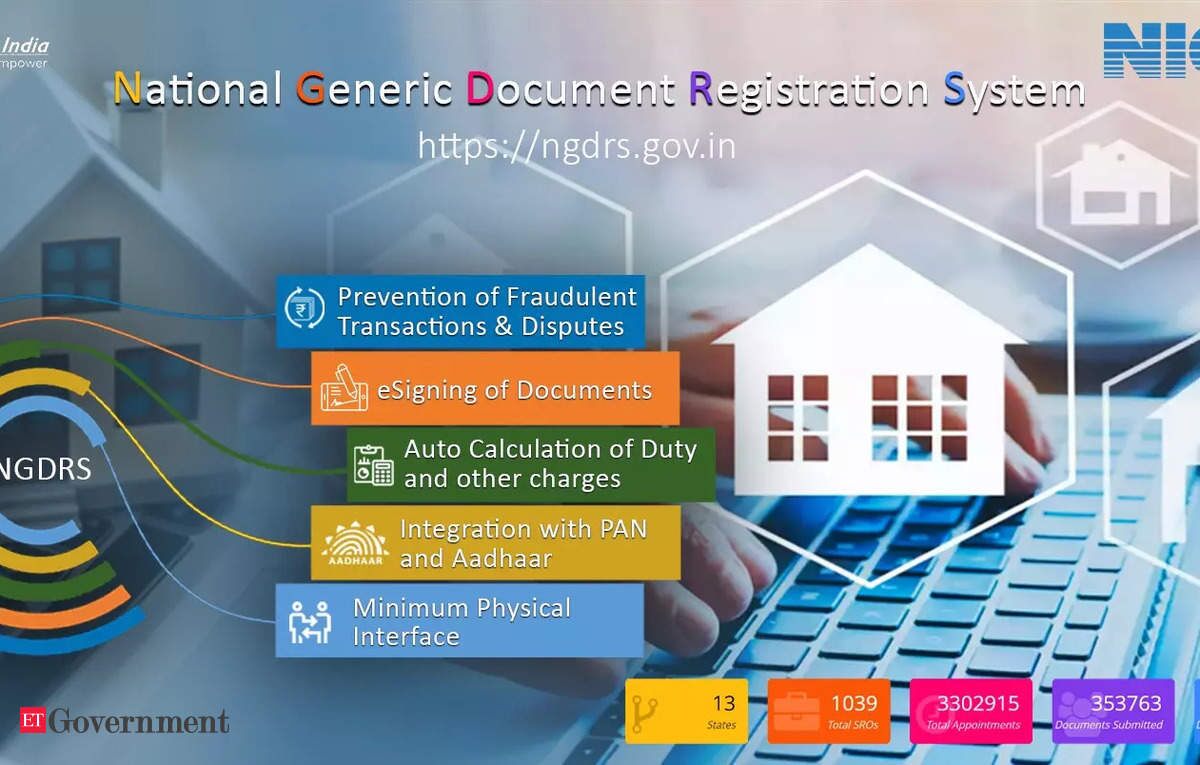
- 14 Feb 2024
Why is it in the News?
Recently, the Secretary, Department of Land Resources, rolled out the National Generic Document Registration System (NDGRS) throughout Assam along with the launch of Unique Land Parcel Identification Number (ULPIN) seeding of geo-referenced Cadastral Maps.
About National Generic Document Registration System:
- The Department of Land Resources has developed the National Generic Document Registration System (NGDRS) as part of the Digital India Land Records Modernisation Programme (DILRMP).
- As many as 28 States / UTs have adopted the NGDRS for Land Records.
- The NGDRS application is developed by the National Informatics Centre, Pune.
- It is a common, generic application developed for registration departments across the country under the One Nation One Software initiative.
Objectives of NGDRS:
- With technology being one of the major enablers, it is ensured that registrations and delivery of documents to the parties happen faster in comparison to the conventional methods. The broad level objectives are:
- One Nation One Software
- Generic platform for registration of properties and document across the country
- Citizen empowerment by enabling property valuation and online document submission
- A single platform of all the stakeholders in registration process
Features of NGDRS:
- It is a nationwide registration department application that is generic, standardised, and adaptable.
- Sub-registrars, citizens, and apex users from registration departments are the intended users of this program.
- NGDRS makes it easier for states to set up state-specific instances and customise the program to meet their needs.
- With its comprehensive user interface for document and property registration, the program makes it possible for citizens to continue with online land purchases.
- They are able to determine the circle rate for land, determine the type of land, and value properties based on current rates.
- The inability to transact in properties that are prohibited—such as government, tribal, mortgaged, etc.—helps them eventually determine where and what kind of land to purchase.
- After that, clients may schedule appointments in advance, apply online for document submission, and make quick payments.
- Purchasers of real estate only need to make one visit to the sub-registrar's office, and that should be during the final registration and signing process.
What is ULPIN?
- It is the distinct blockchain ID, and the land parcel's ULPIN from BhuNaksha allows for a unique identification.
- Every land parcel has a unique 14-digit alphanumeric identification number, often known as the AADHAR or fingerprint for land.
- The identification relies on georeferenced cadastral maps and is based on the land parcel's longitude and latitude.
- ULPIN has the following advantages: it guarantees transaction uniqueness, maintains current spatial records, connects property transactions, shares land record data across departments and financial institutions, and gets rid of fraudulent transactions.
Carbon Nanotubes (CNTs) (DST)

- 14 Feb 2024
Why is it in the News?
Recently, researchers at the Institute of Advanced Study in Science and Technology (IASST) have pioneered a novel method for directly synthesising CNTs on glass substrates at a temperature of 750 °C.
What are Carbon Nanotubes (CNTs)?
- A carbon nanotube is a small cylindrical carbon structure made out of graphene.
- The tube comprises hexagonal structures.
- Despite their very small size, carbon nanotubes are very strong.
- Carbon nanotubes are also known as “Buckytubes” because they resemble R. Buckminster Fuller’s geodesic domes.
- They are pivotal in advancing modern technology by showcasing extraordinary properties.
- Applications: They have found applications in diverse fields, including rechargeable batteries, flexible electronics, aerospace, transparent electrodes, touch screens, supercapacitors, and medicine.
- Recent Developments: The experiment employs the Plasma Enhanced Chemical Vapour Deposition Technique (PECVD), in which a spiral-shaped fused hollow cathode source is specifically constructed to create plasma.
- This novel method avoids the requirement for high temperatures and does not require a transition metal catalyst.
Why is It Necessary?
- Metal catalysts (Fe, Co, and Ni) and high temperatures (~1000 0C) are needed for conventional CNT production procedures.
- Concerns about biocompatibility arise with these catalysts for possible biomedical uses.
- A fascinating area of nanotechnology, the removal of these catalysts from CNTs presents a huge financial hurdle, underscoring the urgent need for cleaner, more sustainable CNT synthesis techniques.
- Clean CNTs that can be used in biomedical settings, optoelectronics, and energy studies may now be produced.
Atlantic Meridional Overturning Circulation (AMOC) (Earth Org)
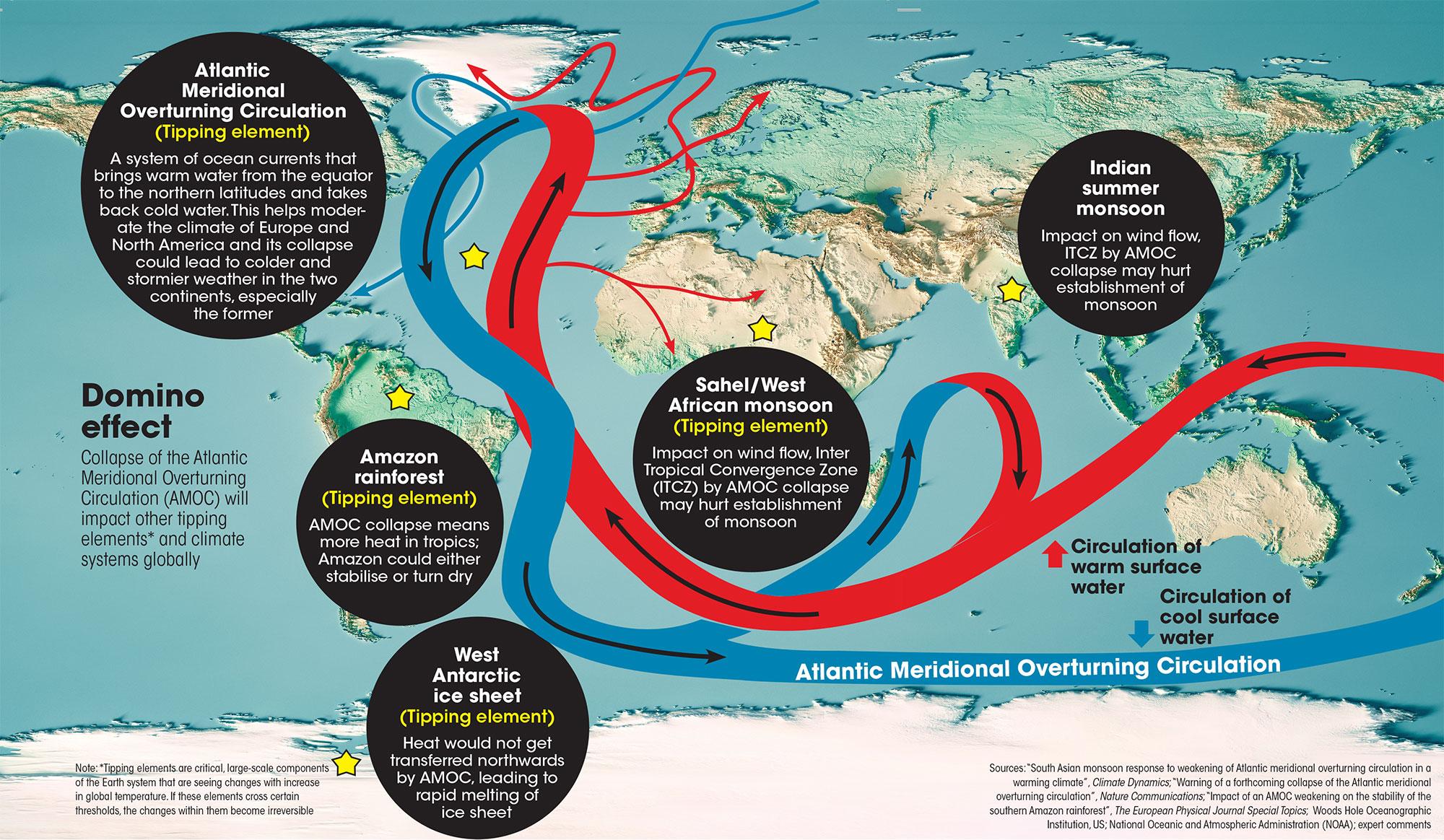
- 14 Feb 2024
Why is it in the News?
The circulation of the Atlantic Ocean, a key component in global climate regulation, is “on route” to a tipping point, according to a new study, which describes the findings as “bad news for the climate system and humanity.”
What is Atlantic Meridional Overturning Circulation (AMOC)?
- The ocean’s water is constantly circulated by currents.
- Tidal currents occur close to shore and are influenced by the sun and moon and the surface currents are influenced by the wind.
- However, other, much slower currents that occur from the surface to the seafloor are driven by changes in the saltiness and ocean temperature, a process called thermohaline circulation.
- These currents are carried in a large "global conveyor belt," which includes the AMOC.
- AMOC stands for Atlantic Meridional Overturning Circulation.
- The AMOC circulates water from north to south and back in a long cycle within the Atlantic Ocean.
- This circulation brings warmth to various parts of the globe and also carries nutrients necessary to sustain ocean life.
- The circulation process begins as warm water near the surface moves toward the poles (such as the Gulf Stream in the North Atlantic), where it cools and forms sea ice.
- As this ice forms, salt is left behind in the ocean water.
- Due to the large amount of salt in the water, it becomes denser, sinks down, and is carried southwards in the depths below.
- Eventually, the water gets pulled back up towards the surface and warms up in a process called upwelling, completing the cycle.
- The entire circulation cycle of the AMOC, and the global conveyor belt, is quite slow.
- It takes an estimated 1,000 years for a parcel (any given cubic meter) of water to complete its journey along the belt.
- Even though the whole process is slow on its own, there is some evidence that the AMOC is slowing down further.
Is the AMOC Slowing Down?
- As our climate continues to change, there is a possibility that the AMOC will slow down, or come to a complete stop.
- While research shows it is weakening over the past century, whether or not it will continue to slow or stop circulating completely remains uncertain.
- If the AMOC does continue to slow down, however, it could have far-reaching climate impacts.
- For example, if the planet continues to warm, freshwater from melting ice at the poles would shift the rain belt in South Africa, causing droughts for millions of people.
What Would Happen if AMOC Failed?
- AMOC acts as a sort of "switch" for the climate, particularly in Europe and the northern hemisphere.
- It would result in less precipitation in regions like Europe, North America, China, and certain regions of Russia in Asia, as well as widespread cooling throughout the northern hemisphere.
- The Amazon rainforest might become dry and drought-prone as a result of the extra heat brought on by a collapsing AMOC, and it might even become a savannah state.
- In certain areas, monsoon development and rainfall might be impeded by a slowing in AMOC.
- There might be less rainfall in the Sahel (the West African monsoon area), less summer monsoon circulation in South Asia and India, and more winter storms in Europe.
- The summer monsoon circulation over the Indian subcontinent and the sea level pressure gradient are both weakened by a weakening of the land-sea heat gradient.
India's retail inflation moderates to 5.10 per cent in January (The Hindu)

- 13 Feb 2024
Why is it in the News?
India's retail inflation has eased to 5.10% on an annual basis, according to data released by the Ministry of Statistics & Programme Implementation.
What is Retail Inflation or CPI-based Inflation?
- Retail inflation, also known as Consumer Price Index (CPI) inflation tracks the change in retail prices of goods and services which households purchase for their daily consumption.
- CPI is released by The National Statistical Office (NSO), Ministry of Statistics and Programme Implementation (MoSPI).
- To measure inflation, we estimate how much CPI has increased in terms of percentage change over the same period the previous year.
- If prices have fallen, it is known as deflation (negative inflation).
- The Central Bank (RBI) pays very close attention to this figure in its role of maintaining price stability in the economy.
- The CPI monitors retail prices at a certain level for a particular commodity; and price movement of goods and services at rural, urban and all-India levels.
- The change in the price index over a period of time is referred to as CPI-based inflation or retail inflation.
- Generally, CPI is used as a macroeconomic indicator of inflation, as a tool by the central bank and government for inflation targeting and for inspecting price stability, and as a deflator in the national accounts.
- CPI also helps understand the real value of salaries, wages, and pensions, the purchasing power of the nation’s currency, and regulating rates.
- CPI, one of the most important statistics to ascertain economic health, is generally based on the weighted average of the prices of commodities.
- It basically gives an idea of the cost of the standard of living.
- CPI specifically identifies periods of deflation or inflation for consumers in their day-to-day living expenses.
- If there is inflation (when goods and services cost more) the CPI will rise over a period of time.
- If the CPI drops, that means there is deflation or a steady reduction in the prices of goods and services.
How is CPI calculated (CPI formula)?
- To calculate CPI, multiply 100 by the fraction of the cost price of the current period and the base period.
- CPI formula: (Price of the basket in current period / Price of the basket in base period) x 100
Odisha’s Gupteswar Forest Is Now A Biodiversity Heritage Site (TOI)
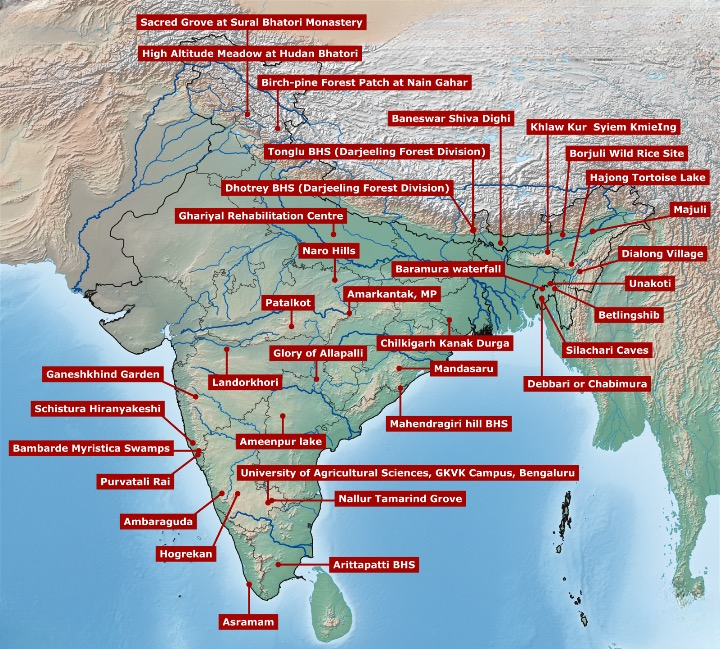
- 13 Feb 2024
Why is it in the News?
Gupteswar forest in the Koraput district of Odisha has been officially declared the fourth biodiversity heritage site (BHS) in the state.
What is a Biodiversity Heritage Site (BHS)?
- A Biodiversity Heritage Site (BHS) is a unique ecosystem with rich biodiversity that is designated for special protection and conservation.
- These sites are typically declared by individual states or local bodies under the provisions of the Biological Diversity Act, of 2002, in India.
Who can Declare BHS?
- Under Section 37 of the Biological Diversity Act, 2002 the State Government in consultation with local bodies may notify areas of biodiversity importance as Biodiversity Heritage Sites (BHS).
- The ‘Biodiversity Heritage Sites’ (BHS) are unique ecosystems having rich biodiversity comprising of any one or more of the following components:
- The richness of wild as well as domesticated species or intra-specific categories.
- High endemism.
- Presence of rare and threatened species, keystone species, and species of evolutionary significance.
- Wild ancestors of domestic/cultivated species or their varieties.
- Past pre-eminence of biological components represented by fossil beds and having significant cultural, ethical or aesthetic values are important for the maintenance of cultural diversity, with or without a long history of human association with them.
- “The creation of BHS may not put any restriction on the prevailing practices and usages of the local communities, other than those voluntarily decided by them.
- The purpose of declaring BHS is to enhance the quality of life of the local communities through conservation of such sites.”
The main objectives of declaring an area as a BHS are:
- To conserve biological diversity, including genetic diversity, ecosystem diversity, and species diversity.
- To protect habitats of rare, endemic, and threatened species.
- To promote sustainable use of biodiversity.
- To maintain cultural diversity and traditional knowledge associated with biodiversity.
- To raise awareness about the importance of biodiversity conservation.
Biodiversity Heritage Sites (BHS) of India:
Revival of Weimar Triangle (The Hindu)
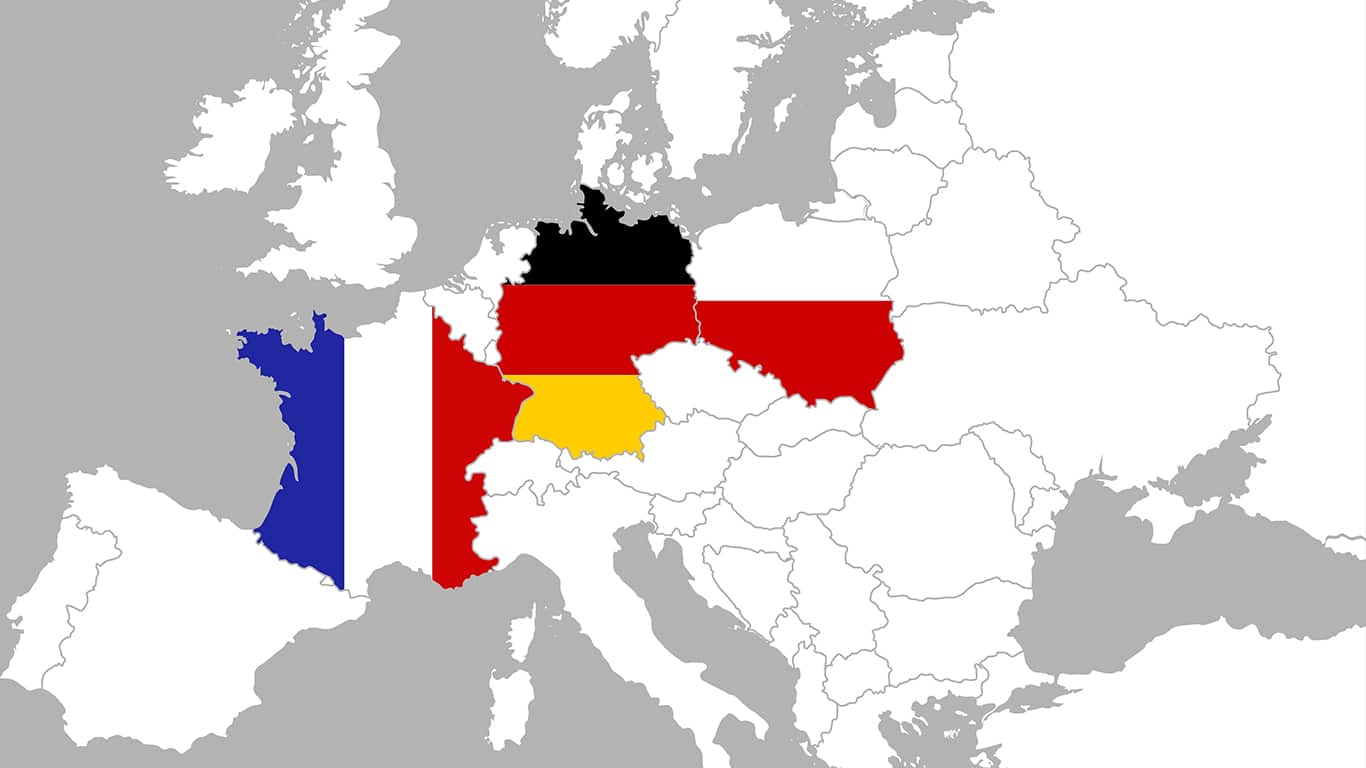
- 13 Feb 2024
Why is it in the News?
The governments of Poland, France and Germany vowed Monday to make Europe a security and defence power with a greater ability to back Ukraine, amid concerns that former U.S. President Donald Trump might return to the White House and allow Russia to expand its aggression on the continent.
What is the Weimar Triangle?
- The Weimar Triangle is a regional alliance of three European countries:
- France
- Germany
- Poland
- It was established in 1991 in the German city of Weimar, with the aim of promoting cooperation between the three countries on cross-border and European issues.
- The Weimar Triangle is not a formal organization, but rather a platform for dialogue and cooperation.
- The three countries hold regular summits, typically at the level of heads of state or government, and their foreign ministers also meet frequently.
- The Weimar Triangle also includes cooperation between parliaments, militaries, scientists, and cultural institutions.
Significance of the Weimar Triangle:
- The Weimar Triangle has played a significant role in European integration.
- It helped to support Poland's emergence from communism and its accession to the European Union in 2004.
- In recent years, the Weimar Triangle has taken on a renewed importance as Europe has faced a number of challenges, including the Ukraine crisis and the rise of populism.
- The three countries have worked together to promote stability and cooperation in Europe.
Some of the key areas of cooperation between the Weimar Triangle countries:
- Security: The three countries cooperate on a range of security issues, including defence, counterterrorism, and cybersecurity.
- Economy: The Weimar Triangle countries are major trading partners, and they work together to promote economic growth and integration.
- Energy: The three countries are working together to develop a more secure and sustainable energy supply.
- Climate change: The Weimar Triangle countries are committed to combating climate change and have pledged to meet the targets of the Paris Agreement.
- Culture: The three countries have a rich cultural heritage, and they work together to promote cultural exchange and understanding.
Greening India's Wastelands with Agroforestry (GROW) Report and Portal (DD News)
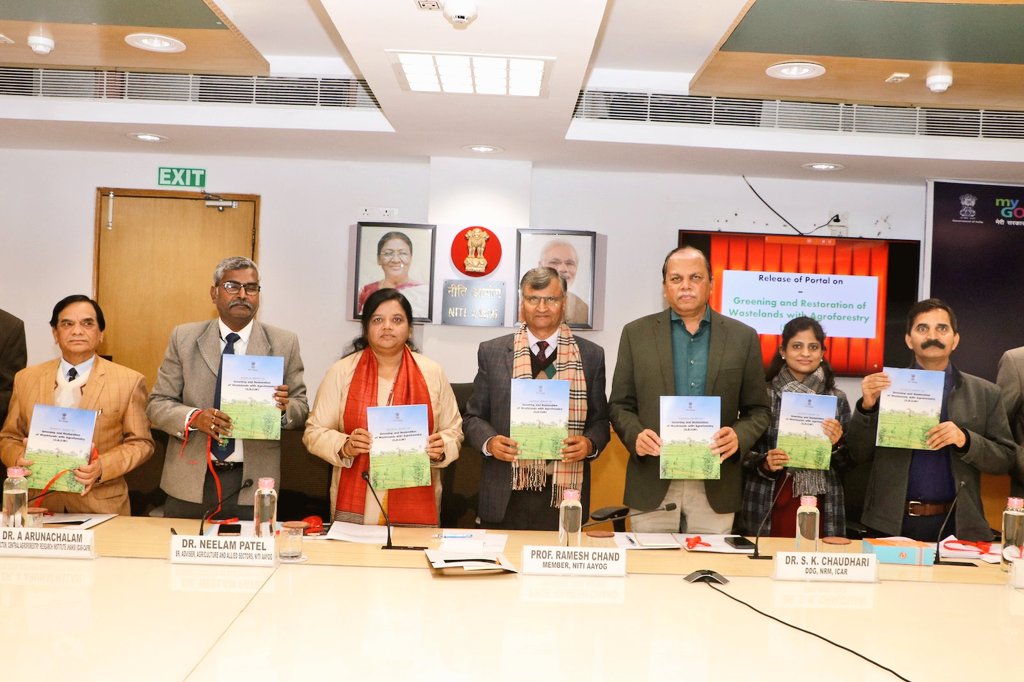
- 13 Feb 2024
Why is it in the News?
NITI Aayog recently unveiled the Greening and Restoration of Wasteland with Agroforestry (GROW) report and portal, aiming to bolster efforts in environmental conservation and sustainable land use across India.
About the Greening India's Wastelands with Agroforestry (GROW) Portal:
- The "Greening and Restoration of Wasteland with Agroforestry (GROW)-Suitability Mapping" portal offers universal access to state and district-level data.
- Hosted on the Bhuvan website, the GROW initiative aligns with national commitments to restore 26 million hectares of degraded land by 2030 and create an additional carbon sink of 2.5 to 3 billion tonnes of carbon dioxide equivalent.
- Led by NITI Aayog, the initiative involved collaboration from various institutions and utilized advanced technologies like remote sensing and GIS to assess agroforestry suitability across all Indian districts.
- Through thematic datasets, the project developed an Agroforestry Suitability Index (ASI) for national-level prioritization of greening and restoration projects.
- Based on analysis of five remote sensing-derived thematic layers - land use, wasteland, slope, water proximity, and soil organic content - the system provides information on areas suitable for agroforestry across India.
- It classifies areas as highly suitable, moderately suitable, and less suitable for agroforestry.
- Key features include generating district-level information on wasteland areas suitable for agroforestry, area prioritization regimes, live maps, area analysis-statistic reports, and an interactive mode/tool for flexibility in handling weights based on local conditions/needs.
Government Emphasis on Agroforestry in Budget Allocation:
- The Union Budget for the fiscal year 2022-23 has underscored the promotion of agroforestry and private forestry as a priority.
- Recognizing the critical goods and services provided by agroforestry, the budget aligns with the country's commitment to sustainable land use practices.
India's Agroforestry Leadership and Global Alignments:
- As the seventh-largest country globally, India faces challenges such as increased build-up areas, degraded land, and imbalanced resources.
- Approximately 16.96% of the Total Geographical Area (TGA) is a wasteland, necessitating transformation for productive use.
- India's pioneering National Agroforestry Policy, initiated in 2014, aims to enhance productivity, profitability, and sustainability through agroecological land use systems.
- Agroforestry aligns with global commitments, including the Paris Agreement, Bonn Challenge, UN Sustainable Development Goals, United Nations Convention on Combating Desertification (UNCCD), Doubling Farmers Income, Green India Mission, and more.
- India's proactive stance in promoting agroforestry contributes significantly to these international efforts, fostering a sustainable and resilient future.
Floor Test in the Bihar Legislative Assembly (Indian Express)
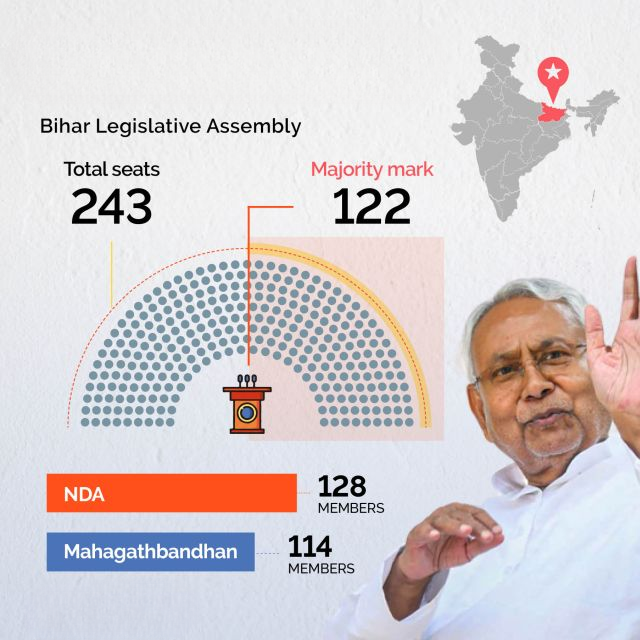
- 13 Feb 2024
Why is it in the News?
Bihar Chief Minister Nitish Kumar's coalition government with the Bhartiya Janata Party (BJP) on Monday won a crucial trust vote in the Bihar Assembly.
What is a Floor Test?
- A floor test (also called a ‘trust vote’) is held in legislative bodies, to find out whether the government that is suspected to have lost the majority still retains the confidence of the House.
- This is done through a vote among the members.
- When the House is in session, it is the Speaker who can call for a floor test but when the Assembly is not in session, the Governor’s residuary powers under Article 163 allow him to call for a floor test.”
- Further, “In 2020, the Supreme Court, in Shivraj Singh Chouhan & Ors versus Speaker, Madhya Pradesh Legislative Assembly & Ors, upheld the powers of the Speaker to call for a floor test if there is a prima facie view that the government has lost its majority.”
What Happens During a Floor Test?
- In case the majority held by the government is questioned, the leader of the party which claims to have the majority has to move a vote of confidence and prove a majority among those present and voting.
- The CM moves a motion seeking a vote of confidence, on which MLAs who are present in the House vote.
- If the majority of members vote in favour, the government survives;
- If the CM loses the vote, the government has to resign.
- This happens both in Parliament and the state Legislative Assemblies.
- Voting can be conducted by either a voice vote, in which MLAs respond to the motion verbally.
- Voting electronically involves the casting of votes by pressing a button, after which the numbers for each side are displayed on a board.
- In a physical division of votes, lawmakers cast votes in a ballot box, which are then counted.
- Also in situations when there are differences within a coalition government, the Governor can ask the Chief Minister to prove majority in the house.
- There is another test, the Composite Floor Test, which is conducted only when more than one person stakes a claim to form the government.
- When the majority is not clear, the governor might call for a special session to see who has the majority.
- The majority is counted based on those present and voting.
- This can also be done through a voice vote where the member can respond orally or through division voting.
- Some legislators may be absent or choose not to vote.
- In division vote, voting can be done through electronic gadgets, ballots or slips.
- The person who has the majority will form the government.
- In case of a tie, the speaker can also cast his vote under Article 100 of the constitution.
Regulating India's Online Gaming Industry (Indian Express)
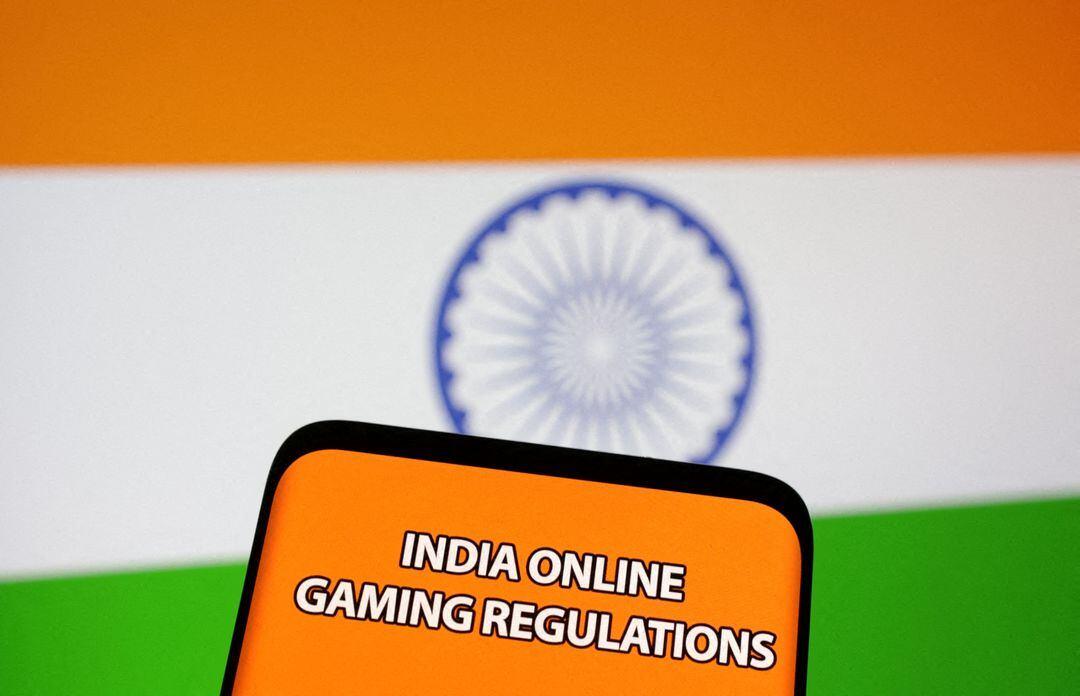
- 12 Feb 2024
Why is it in the News?
The government will act as a regulator for the online gaming sector rather than an industry-led self-regulatory organization (SRO).
What are Online Games?
- Online games refer to games that are played over some form of computer network, most often the Internet.
- Online games can range from simple text-based games to games incorporating complex graphics and virtual worlds populated by many players simultaneously.
Types of Online Gaming:
- e-Sports: Originally played offline or on gaming consoles, e-Sports now thrive in the online realm, featuring structured competitions among professional players or teams.
- Fantasy Sports: These games involve assembling virtual teams composed of real-life athletes from different sports teams.
- Points are earned based on the actual performance of these athletes, as seen in platforms like Dream11.
- Online Casual Games: These diversions can be skill-based, where success relies on mental or physical prowess, or chance-based, where outcomes are determined by random events, like dice rolls.
How Big is India's Online Gaming Industry?
- The online gaming sector in India is primarily nurtured by a burgeoning startup ecosystem, boasting a robust 27% compound annual growth rate (CAGR).
- Projections suggest that the integration of AI and online gaming could contribute up to $300 billion to India's GDP by 2026-27.
- India leads the global charts in terms of the percentage of new paying users (NPUs) in gaming, soaring from 40% in 2020 to an anticipated 50% in 2021.
- Transactional gaming revenue witnessed a notable 26% surge in India, with the number of paying players escalating from 80 million in 2020 to 95 million in 2021, as per a FICCI report.
Challenges Confronting India's Online Gaming Sector:
- Regulatory Void: The absence of a regulatory framework poses challenges in implementing essential measures such as grievance redressal, player protection, data security, and curbing deceptive advertisements.
- Illegal Offshore Markets: Illicit offshore gambling and betting platforms pose threats to financial integrity and national security, with estimated annual tax losses to India amounting to $45 billion.
- Interstate Quandary: Varied state regulations on online gaming create inconsistencies, compounded by the Internet's borderless nature, making enforcement difficult.
- Societal Implications: The surge in online gaming raises concerns about addiction, mental health, financial fraud, and privacy breaches, warranting a comprehensive approach to address these issues.
The Problem of Self-Regulatory Bodies Under the IT Rules:
- The implementation of the IT (Intermediary Guidelines and Digital Media Ethics Code) Rules 2021 represented a significant stride in regulatory oversight.
- According to these rules, online real-money gaming platforms must obtain approval from a regulatory authority, while those not involving real money are exempt from such requirements.
- In April 2023, the government issued online gaming regulations and provided a three-month window for the industry to propose Self-Regulatory Organizations (SROs).
- However, the proposals submitted were predominantly influenced by gaming companies and their industry associations, raising concerns about their ability to function as impartial regulatory bodies.
NAL Successfully Tested High Altitude Pseudo-Satellite (HAPS) at Challakere, Karnataka (TOI)

- 12 Feb 2024
Why is it in the News?
Scientists from city-based National Aerospace Laboratories (NAL), a Council of Scientific and Industrial Research (CSIR) lab, achieved a breakthrough by successfully testing an unmanned aerial vehicle called High-Altitude Pseudo Satellite (HAPS) at Chitradurga's Challakere in Karnataka.
News Summary:
- National Aerospace Laboratories (NAL) has achieved a milestone with the successful testing of an unmanned aerial vehicle known as the High Altitude Pseudo-Satellite (HAPS) in Challakere, Karnataka.
- This innovative system, measuring 5 meters in length with an impressive 11-meter wingspan and weighing 23 kg, soared to an altitude of approximately 3 km and maintained its position for an impressive duration of eight hours.
- A comprehensive series of tests is slated, with the ultimate goal of developing a full-fledged aircraft boasting a remarkable 30-meter wingspan comparable to a Boeing 737 by the year 2027.
- This advanced craft is anticipated to ascend to an impressive altitude of 23 km and remain airborne for a remarkable period of at least 90 days.
- NAL's ambitious agenda includes the design and construction of various components essential for the HAPS, including propellers, battery management systems, carbon-composite airframes, flight-control systems, and high-powered electric motors capable of withstanding extreme temperature variations.
- Additionally, in a separate endeavour, a Bengaluru-based private company recently conducted the inaugural test flight of a solar-powered, long-endurance drone, achieving an impressive flight duration of 21 hours.
About High Altitude Pseudo-Satellite (HAPS):
- Since the 1990s, numerous global initiatives have been undertaken to explore the potential applications of High Altitude Pseudo Satellites, also known as High Altitude Platform Stations (HAPS).
- Positioned above 20 km altitude in the stratosphere, these unmanned aircraft are designed for exceptionally long-duration flights, spanning months or even years.
- HAPS encompass various aircraft types, including airplanes, airships, and balloons.
Benefits/Advantages of HAPS:
- These solar-powered vehicles bridge the gap between unmanned aerial vehicles (UAVs) operating in lower altitudes and traditional satellites in space.
- They offer a wide array of applications, including telecommunications, emergency/public safety communications, intelligent transportation systems, maritime surveillance, environmental monitoring, and land border control.
- Compared to ground-based communication networks, HAPS can cover larger areas with minimal interference and facilitate data transfer between satellites and ground-based telecom networks.
- Unlike traditional satellites, which are costly to construct and launch, HAPS are more cost-effective and easier to deploy.
- It has both military and civilian applications, including intelligence, surveillance, telecommunication, and disaster response.
- The technology offers lower latency and can connect to multiple ground stations.
Significance for India:
- In India, Hindustan Aeronautics Limited (HAL) announced in 2022 its collaboration with a startup company to develop a "futuristic" high-altitude pseudo satellite.
- Given India's extensive land borders stretching approximately 15,000 km and a coastline spanning 7,500 km, securing these borders is paramount, necessitating diverse solutions.
- Hovering at the Earth's atmospheric edge, HAPS offer valuable services for efficient border surveillance, tracking enemy movements deep into territories or seas, and conducting round-the-clock missions.
- Equipped with advanced optical and infrared cameras, state-of-the-art sensors, and other sophisticated technology, these aerial platforms are ideal for border patrolling, target tracking, maritime surveillance, navigation, and even missile detection.
- China's Aviation Industry Corporation of China (AVIC), a state-owned aerospace and defense conglomerate, has been actively developing various HAPS platforms for surveillance purposes.
- In 2018, it successfully tested the solar-powered Morning Star drone, renowned for its prolonged airborne endurance.
What Is Nazool Land Which Is At The Heart Of Haldwani Violence? (Indian Express)
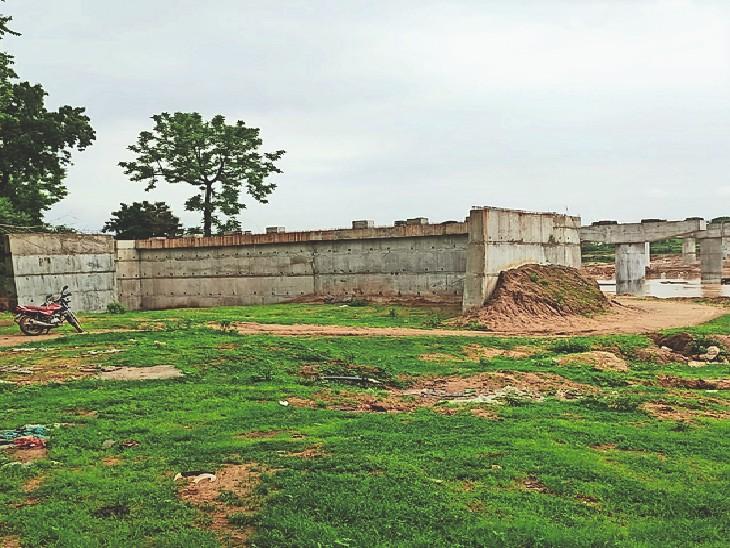
- 12 Feb 2024
Why is it in the News?
Violence erupted in Uttarakhand’s Haldwani district recently after the administration conducted a demolition drive at the site of a mosque and madrasa, allegedly on Nazool land, killing five and injuring many more.
What is Nazool Land?
- Nazool land is owned by the government but most often not directly administered as state property.
- The state generally allots such land to any entity on lease for a fixed period, between 15 and 99 years.
- In case the lease term is expiring, one can approach the authority to renew the lease by submitting a written application to the Revenue Department of the local development authority.
- The government is free to either renew the lease or cancel it — taking back Nazool land.
- In almost all major cities of India, Nazool land has been allotted to different entities for a variety of different purposes.
How did Nazool Land Emerge?
- During British rule, kings and kingdoms which opposed the British frequently revolted against them, leading to several battles between them and the British Army.
- Upon defeating these kings in battle, the British would often take their land away from them.
- After India gained Independence, the British vacated these lands.
- But with kings and royals often lacking proper documentation to prove prior ownership, these lands were marked as Nazool land — to be owned by the respective state governments.
How Does the Government Use Nazool Land?
- The government generally uses Nazool land for public purposes like building schools, hospitals, Gram Panchayat buildings, etc.
- Several cities in India have also seen large tracts of land denoted as Nazool land used for housing societies, generally on lease.
- Very often, the state does not directly administer Nazool land but rather leases it to different entities.
- While several states have brought in government orders for framing rules for Nazool land, The Nazool Lands (Transfer) Rules, 1956 is the law mostly used for Nazool land adjudication.
New Education Policy Taking Forward Swami Dayanand’s Vision (Indian Express)
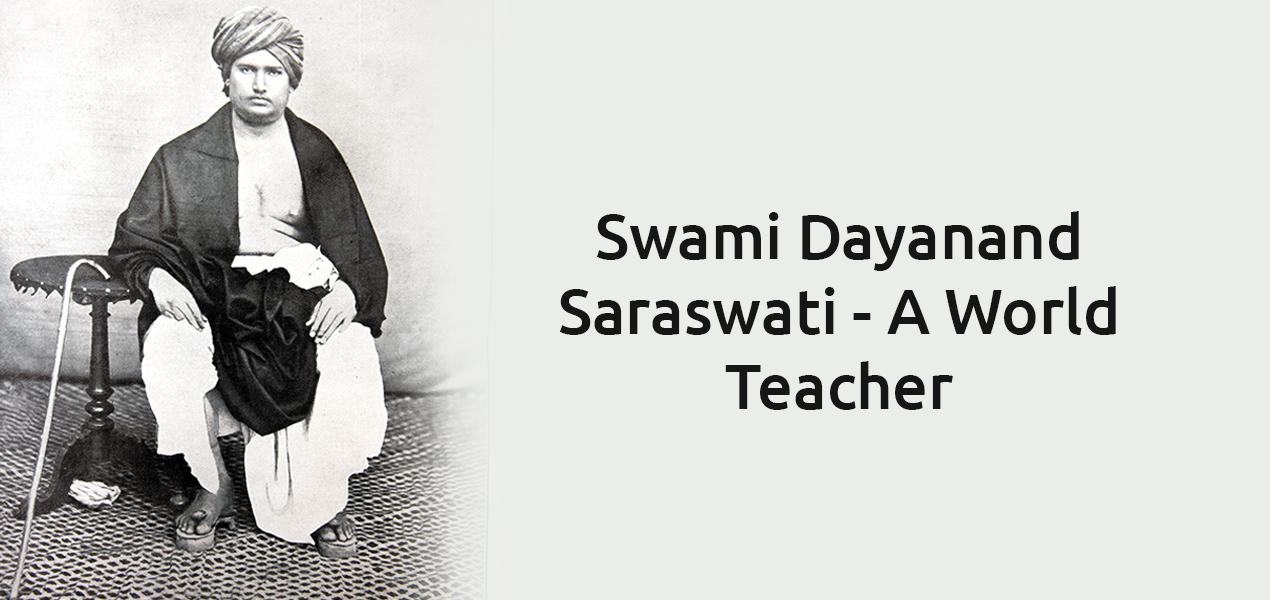
- 12 Feb 2024
Why is it in the News?
The National Education Policy 2020 is taking forward the vision of social reformer Swami Dayanand Saraswati, Prime Minister Narendra Modi said recently.
Who was Maharishi Dayanand Saraswati?
- Maharishi Dayanand Saraswati, born on February 12, 1824, in Tankara, Gujarat, was a pioneering social reformer.
- He established the Arya Samaj in 1875 with the aim of addressing prevailing social injustices.
Religious and Social Reforms:
- Rejection of Idolatry and Ritualism: Dayanand Saraswati staunchly opposed idol worship and ritualistic practices, advocating instead for the worship of a formless, attributeless God as outlined in the Vedas.
- Shuddhi Movement: He initiated the Shuddhi Movement to reclaim individuals who had converted to religions like Islam or Christianity, aiming to reintegrate them into Hinduism.
- Back to Vedas: Recognizing the importance of Vedic wisdom, he spearheaded a movement to revive the teachings of the Vedas, emphasizing their relevance in modern society.
- Women’s Rights: Dayanand Saraswati championed women’s rights, advocating for their education and equal participation in social and religious spheres alongside men.
- Opposition to Child Marriage and Sati: He vehemently opposed practices like child marriage and sati, viewing them as detrimental to society and antithetical to Vedic principles.
Educational Reforms:
- Dayanand Saraswati established several Gurukuls to impart Vedic knowledge to his followers and empower them to disseminate this wisdom further.
- Influenced by his philosophy and vision, his disciples founded the Dayanand Anglo Vedic (DAV) College Trust and Management Society following his demise in 1883.
- The first DAV High School was founded in Lahore on June 1, 1886, under the leadership of Mahatma Hans Raj.
Literary Contributions:
- Dayanand Saraswati's philosophical ideas are encapsulated in his notable works like "Satyartha Prakash" and "Veda Bhashya," shedding light on his vision for Hindu reform.
- His thoughts were further disseminated through the journal "Arya Patrika," which he edited, reflecting his philosophical convictions.
Arya Samaj:
- Founded by Dayanand Saraswati in Bombay in 1875, the Arya Samaj, meaning "society of the nobles," aimed to reform Hinduism by steering it away from superstition.
- With the motto "Krinvanto Vishwam Aryam" meaning "Make this world noble," the Samaj advocated for a return to the true essence of Hinduism, rejecting ritualistic practices like idol worship, pilgrimage, and animal sacrifice.
- In the 1880s, the Samaj actively supported widow remarriage, promoting social reforms aligned with its principles.
- The Arya Samaj's influence extends beyond India, with active branches worldwide.
PM-SVANidhi Boosted the Annual Income of Street Vendors (Indian Express)
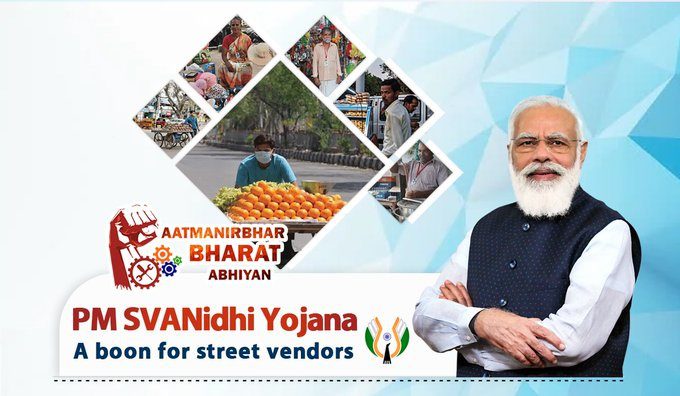
- 12 Feb 2024
Why is it in the News?
A study that evaluated the impact of the PM SVANidhi, a small working capital loan scheme for street vendors, has found that the first tranche of `10,000 led to an additional annual income of `23,460 for each beneficiary.
News Summary:
- Commissioned by the Union Ministry of Housing and Urban Affairs, the study was conducted by the Centre for Analytical Finance at the Indian School of Business (ISB) from January to June 2023.
- Although the report's findings will inform the Ministry's assessment of the PM SVANidhi scheme, it is not expected to be publicly released.
Key Findings of the Report:
- 94% of beneficiaries who received the initial Rs 10,000 loan reported using it for business investments, rising to 98% for those who received a second loan.
- The first loan contributed to an average additional monthly income of Rs 1,955, totalling Rs 23,460 over the one-year loan period.
- Approximately 13.9% of disbursed loans were categorized as non-performing assets (NPAs), indicating no payments for three months or more.
- Beneficiaries demonstrated a lower debt-to-income (DTI) ratio compared to typical small businesses, indicating high creditworthiness.
- Despite the PM SVANidhi program, there was limited improvement in street vendors accessing formal credit from other sources, with only 9% having loans from financial institutions.
What is PM SVANidhi?
- The Prime Minister Street Vendor’s AtmaNirbhar Nidhi (PM SVANidhi) stands as a flagship initiative of the Ministry of Housing and Urban Affairs, Government of India, launched on June 1, 2020.
- Its core aim is to extend accessible credit to street vendors, enabling them to revive their businesses and achieve self-reliance.
- The scheme is specifically tailored to empower street vendors, including hawkers, rehri walas, thelewala, and those operating in urban and peri-urban areas.
- PM SVANidhi facilitates eligible street vendors to obtain working capital loans devoid of collateral requirements.
- These loans, with a maximum cap of Rs. 10,000 and a one-year tenure, are intended to support vendors in procuring essential items, securing raw materials, and meeting their operational expenses.
- Furthermore, the scheme offers a 7% interest subsidy to vendors who repay their loans promptly, promoting timely repayments and fostering financial discipline.
How Does PM SVANidhi Work?
- The PM SVANidhi scheme operates through a streamlined and accessible application process designed to maximize participation and outreach among street vendors.
- Vendors can apply for the scheme via a dedicated online portal or through Common Service Centers (CSCs) established nationwide.
- Once the application is submitted, it undergoes a brief verification process conducted by relevant authorities.
- Upon successful verification, the loan amount is directly transferred to the vendor's bank account.
- Vendors can then utilize the funds to revive their businesses, purchase inventory, and cover operational expenses.
Key Features and Benefits of PM SVANidhi:
- Affordable Credit: PM SVANidhi offers accessible working capital loans of up to Rs. 10,000 to street vendors, facilitating credit access without the need for collateral.
- Interest Subsidy: The scheme provides a 7% interest subsidy to vendors who repay their loans promptly, incentivizing timely repayments and easing financial burdens.
- Digital Empowerment: PM SVANidhi promotes digital transactions and payments among street vendors, fostering adaptation to evolving business practices and enhancing financial literacy.
- Enhanced Livelihood: By availing of PM SVANidhi benefits, street vendors can improve their livelihoods, expand their businesses, and generate sustainable income for themselves and their families.
- Access to Social Security Schemes: Street vendors enrolled in PM SVANidhi are eligible for various social security schemes, including Pradhan Mantri Suraksha Bima Yojana (PMSBY) and Pradhan Mantri Jeevan Jyoti Bima Yojana (PMJJBY), providing financial coverage and protection during unforeseen events.
Conclusion
The Prime Minister Street Vendor’s AtmaNirbhar Nidhi (PM SVANidhi) scheme stands as a beacon of hope for street vendors throughout India. By offering accessible credit, digital empowerment, and access to social security schemes, PM SVANidhi is propelling the advancement and prosperity of street vendors, empowering them to establish sustainable livelihoods. This groundbreaking initiative, with its manifold advantages and inspiring success stories, underscores the Government of India's dedication to fostering an inclusive and self-sufficient economy.
7th Indian Ocean Conference 2024 (The Hindu)
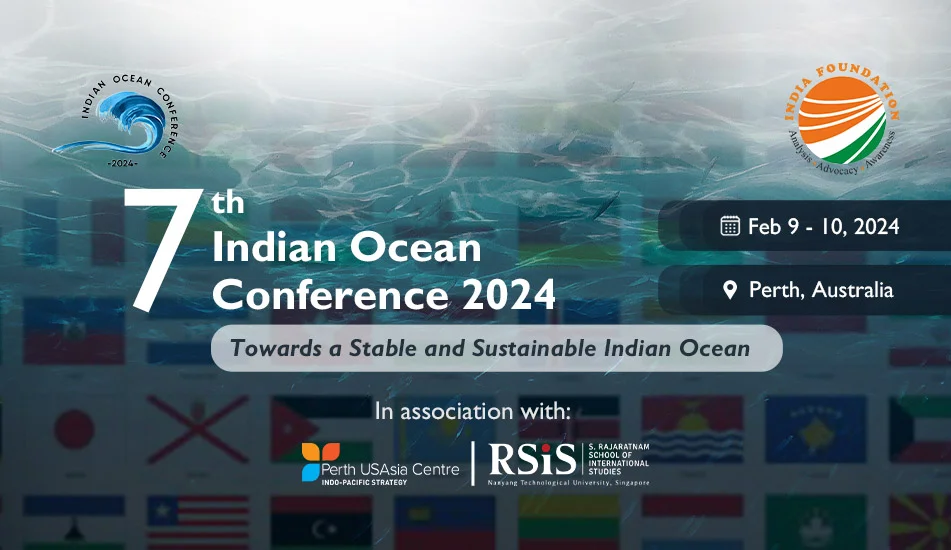
- 10 Feb 2024
Why is it in the News?
During the inauguration of the Indian Ocean Conference in Perth, Sri Lankan President Ranil Wickremesinghe highlighted the escalating concerns of smaller countries in the region regarding the militarization of the Indian Ocean and the increasing "great power rivalry."
What is the Indian Ocean Conference (IOC)?
- The Indian Ocean Conference (IOC) is an annual international event that centres on the geopolitical, economic, and strategic significance of the Indian Ocean region.
- It serves as a platform for policymakers, scholars, business leaders, and civil society representatives to discuss security, trade, and cooperation within the Indian Ocean area.
- Established in 2016, the conference's first edition took place in Singapore.
- Notably, the 6th IOC convened in Dhaka, Bangladesh, in 2023.
- Organized by the India Foundation in collaboration with various regional organizations, the IOC facilitates dialogue and collaboration on key issues impacting the Indian Ocean region.
Key Points from EAM Jaishankar’s Speech:
- Addressing Challenges in the Indian Ocean: Jaishankar highlighted the spectrum of challenges in the Indian Ocean, ranging from threats to maritime traffic like piracy and terrorism to concerns about international law, freedom of navigation, and sovereignty.
- He emphasized the interconnected nature of transnational and non-traditional threats, including those arising from illegal activities.
- Concerns about Grey Areas: Expressing concern about grey areas, Jaishankar noted that some issues, such as those related to climate change and natural disasters, are increasingly visible.
- He also discussed disruptive events and their impact, along with the consequences of distant crises like fuel and food shortages.
- Additionally, unsustainable debt, opaque lending practices, and unviable projects are affecting countries in the region.
- Structural Challenges of Globalization: Jaishankar discussed the structural challenges inherent in the current form of globalization, emphasizing over-concentrations in manufacturing and technology.
- He highlighted the importance of dispersing production across different geographies, especially in light of the COVID-19 pandemic, and emphasized the need for reliable and resilient supply chains.
- Additionally, he noted the significance of trust and transparency in the digital era and the emergence of artificial intelligence.
- Drivers of the Future: Jaishankar underscored the importance of focusing on drivers of the future, such as digital technology, electric mobility, green hydrogen, and sustainable shipping, for a sustainable future.
About the Indian Ocean Region (IOR):
- The Indian Ocean Region (IOR) comprises the Indian Ocean and its adjacent territories, including coastal states and islands.
- Extending from the African coast in the west to the Australian coast in the east, and from the Arabian Peninsula and the Persian Gulf in the north to the southern coast of Sri Lanka and Australia in the south, the IOR covers approximately 70.6 million square kilometres, making it the world's third-largest ocean.
Significance of the Indian Ocean Region (IOR):
- Geopolitical Importance: Positioned as a major transit route for global trade, the IOR facilitates the transportation of vital commodities, including oil and gas.
- It hosts critical chokepoints like the Strait of Malacca and the Bab-el-Mandeb Strait, connecting Asia, Europe, and Africa.
- Economic Importance: Boasting several rapidly developing economies like India, China, and various Southeast Asian nations, the IOR is rich in natural resources, attracting substantial foreign investment.
- With 64% of the global population and 60% of the global GDP, the region plays a significant role in the global economy.
- Security Importance: The IOR is a region of paramount security significance, confronting challenges such as terrorism, piracy, and maritime security threats.
- It has witnessed heightened military activity from major powers like the US, India, and China in recent times.
- Environmental Importance: Home to diverse marine ecosystems like coral reefs and mangrove forests, the IOR supports biodiversity and sustains local communities.
- However, it faces environmental risks due to climate change, including rising sea levels and more frequent extreme weather events.
Monetary Policy Committee (MPC) of RBI (The Hindu)
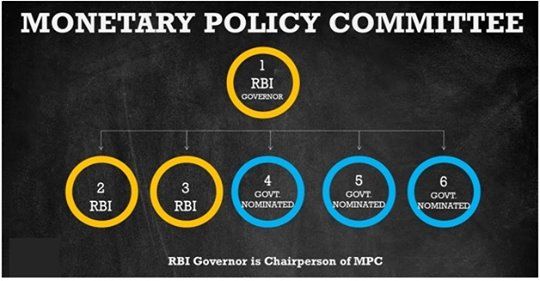
- 10 Feb 2024
Why is it in the News?
The RBI’s Monetary Policy Committee (MPC) has prudently opted to persist with its objective of ‘ensuring that inflation progressively aligns to the target’ by keeping benchmark interest rates unchanged, and sticking with its stance of ‘withdrawal of accommodation’.
About the Monetary Policy Committee (MPC):
- The Monetary Policy Committee (MPC) is a committee of the Reserve Bank of India (RBI), chaired by its Governor.
- The RBI shall organise at least four meetings of the Monetary Policy Committee in a year.
- Established under Section 45ZB of the RBI Act, 1934, the government forms this six-member committee.
Composition of MPC:
- Comprising six members, three are from the RBI, while the remaining members are appointed by the Government of India.
- Members include the RBI Governor (Chairperson), the RBI Deputy Governor responsible for monetary policy, one official nominated by the RBI Board, and three members proposed by the Government of India (chaired by the Cabinet Secretary).
- MPC members serve a single four-year term and are not eligible for reappointment.
Functions:
- The primary responsibility of the MPC is to determine the benchmark policy interest rate (repo rate) to manage inflation within the prescribed target level.
- The current mandate of the committee is to maintain annual consumer price index (CPI) inflation at 4% within a band of +/- 2% until March 31, 2026.
Earth System Model (HT)

- 10 Feb 2024
Why is it in the News?
The Indian Institute of Tropical Meteorology is developing a first-for-India Earth System Model to improve climate forecasts and predict climate impacts.
What is an Earth System Model (ESM)?
- An Earth System Model (ESM) is a complex computer program that simulates the interactions between the various components of our planet's climate system, including the atmosphere, oceans, land, ice, and biosphere.
- These models are crucial for understanding past, present, and future climate trends, and are used for purposes like:
- Improving weather forecasts: By accounting for intricate interactions between different parts of the Earth system, ESMs can potentially lead to more accurate weather predictions, particularly for longer-term forecasts.
- Predicting climate change impacts: By simulating different scenarios of greenhouse gas emissions and other influencing factors, ESMs can project how climate change might affect specific regions and aspects like temperature, precipitation, and sea level rise.
- Informing adaptation and mitigation strategies: With insights into potential climate impacts, policymakers and individuals can make informed decisions about adapting to and mitigating the effects of climate change.
India's Earth System Model:
- Recognizing the importance of such models, India is currently developing its first-ever indigenous Earth System Model, led by the Indian Institute of Tropical Meteorology (IITM) and the Centre for Climate Change Research (CCCR).
- An amount of ?192.28 crores has been sanctioned under the Monsoon Convection, Clouds and Climate Change (MC4) sub-scheme to develop the climate forecasting system
- This project, funded by the Ministry of Earth Sciences, aims to:
- Enhance forecast accuracy: The model will incorporate advanced features to improve the reliability of weather forecasts, particularly for monsoons that are crucial for India's agriculture.
- Facilitate long-term climate studies: By simulating various climate scenarios, the model will provide valuable insights into potential future climate changes affecting India.
- Predict climate impacts: This model will help assess the risks and potential impacts of climate change on various sectors like agriculture, water resources, and coastal ecosystems.
- The project is expected to be completed by 2025 and is believed to be a significant step towards improving India's understanding and preparedness for the challenges posed by climate change.
About the Monsoon Convection, Clouds, and Climate Change (MC4) Sub-Scheme:
- The MC4 initiative aims to enhance our understanding of monsoonal precipitation changes and their implications in a warming climate by enhancing observational databases and climate models.
- Its overarching objective is to refine our understanding of the interactions between monsoon dynamics, clouds, aerosols, precipitation, and the water cycle within a changing climate context.
The nodal ministry overseeing this effort is the Ministry of Earth Sciences (MoES).
What is an Earth System Model (ESM)?
- An Earth System Model (ESM) is a complex computer program that simulates the interactions between the various components of our planet's climate system, including the atmosphere, oceans, land, ice, and biosphere.
- These models are crucial for understanding past, present, and future climate trends, and are used for purposes like:
- Improving weather forecasts: By accounting for intricate interactions between different parts of the Earth system, ESMs can potentially lead to more accurate weather predictions, particularly for longer-term forecasts.
- Predicting climate change impacts: By simulating different scenarios of greenhouse gas emissions and other influencing factors, ESMs can project how climate change might affect specific regions and aspects like temperature, precipitation, and sea level rise.
- Informing adaptation and mitigation strategies: With insights into potential climate impacts, policymakers and individuals can make informed decisions about adapting to and mitigating the effects of climate change.
India's Earth System Model:
- Recognizing the importance of such models, India is currently developing its first-ever indigenous Earth System Model, led by the Indian Institute of Tropical Meteorology (IITM) and the Centre for Climate Change Research (CCCR).
- An amount of ?192.28 crores has been sanctioned under the Monsoon Convection, Clouds and Climate Change (MC4) sub-scheme to develop the climate forecasting system
- This project, funded by the Ministry of Earth Sciences, aims to:
- Enhance forecast accuracy: The model will incorporate advanced features to improve the reliability of weather forecasts, particularly for monsoons that are crucial for India's agriculture.
- Facilitate long-term climate studies: By simulating various climate scenarios, the model will provide valuable insights into potential future climate changes affecting India.
- Predict climate impacts: This model will help assess the risks and potential impacts of climate change on various sectors like agriculture, water resources, and coastal ecosystems.
- The project is expected to be completed by 2025 and is believed to be a significant step towards improving India's understanding and preparedness for the challenges posed by climate change.
About the Monsoon Convection, Clouds, and Climate Change (MC4) Sub-Scheme:
The MC4 initiative aims to enhance our understanding of monsoonal precipitation changes and their implications in a warming climate by enhancing observational databases and climate models.
- Its overarching objective is to refine our understanding of the interactions between monsoon dynamics, clouds, aerosols, precipitation, and the water cycle within a changing climate context.
- The nodal ministry overseeing this effort is the Ministry of Earth Sciences (MoES).
Preamble to the Constitution of India (Indian Express)
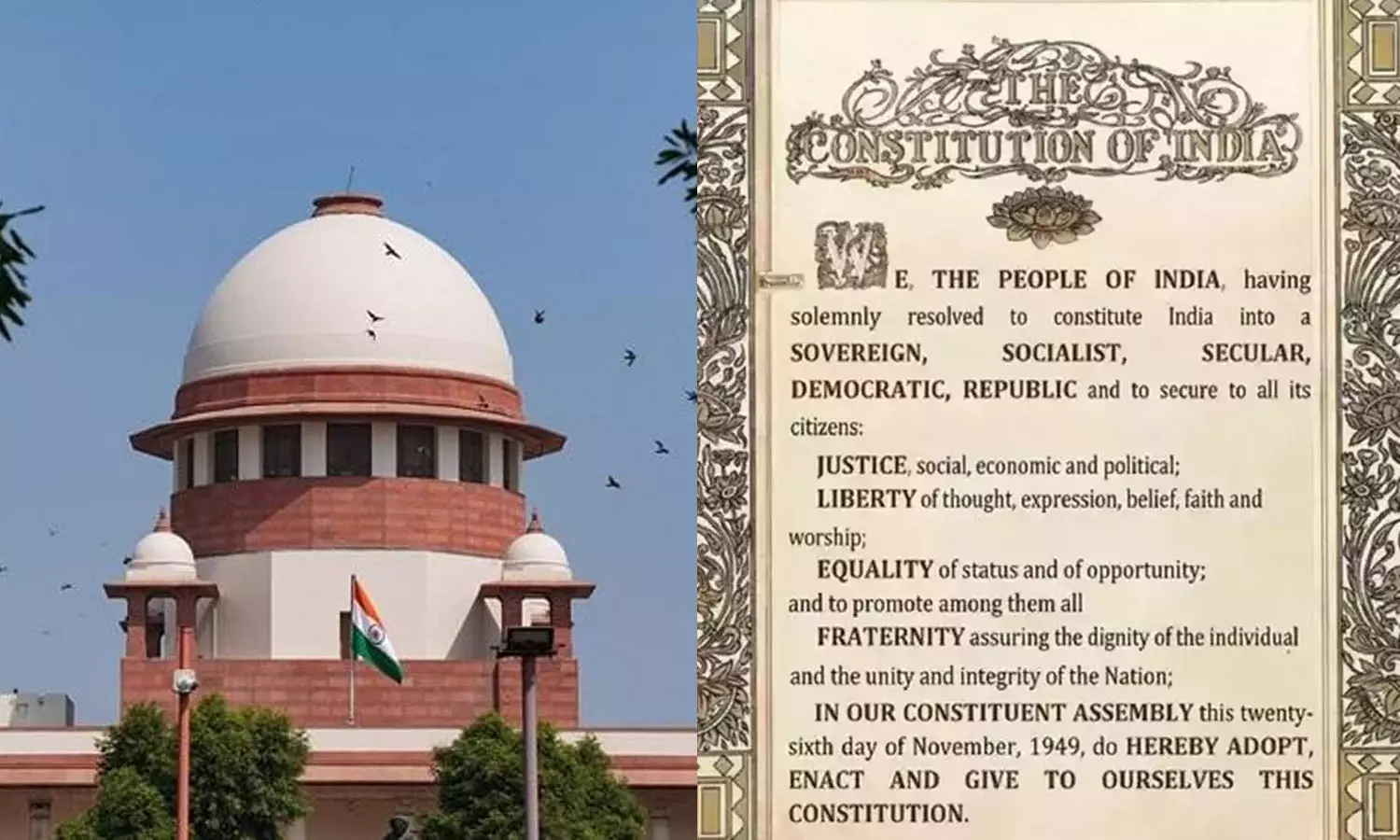
- 10 Feb 2024
Why is it in the News?
The Supreme Court recently wondered if the Preamble to the Constitution could have been amended while retaining the date when the Constitution was adopted.
Background:
- In historical context, the Preamble underwent a solitary amendment in December 1976 via the 42nd Constitutional Amendment during the Indira Gandhi Government.
- This amendment introduced two modifications: replacing "unity of the nation" with "unity and integrity of the nation," and inserting "socialist" and "secular" between "sovereign" and "democratic."
- Initially, the Preamble described India as a "sovereign, democratic republic."
- Notably, the Supreme Court affirmed in the Kesavananda Bharati case that the Preamble constitutes an integral component of the Constitution, subject to Parliament's amending authority, provided the fundamental structure remains intact.
About the Preamble of the Indian Constitution:
- The Preamble to the Constitution of India draws inspiration primarily from the 'Objective Resolution' penned by Jawaharlal Nehru in 1946.
- It serves as a concise introduction, outlining the foundational principles and aspirations of the nation. Key components include:
- Source of Constitutional Authority: It affirms that the Constitution derives its authority from the people of India.
- Nature of the Indian State: It declares India as a Sovereign, Socialist, Secular, Democratic, and Republican Polity.
- Objectives of the Constitution: It articulates Justice, Liberty, Equality, and Fraternity as the core objectives.
- Adoption Date: It designates November 26, 1949, as the date of adoption.
- Significance:
- Acts as a guiding framework for interpreting the Constitution and formulating laws.
- Defines the national aspirations and goals.
- Highlights the importance of fundamental rights and values for all citizens.
- Fosters a sense of national unity and identity.
Is the Preamble a Part of the Constitution of India?
- In the Berubari Union Case of 1960, the Supreme Court stated that the Preamble is not a formal part of the Constitution.
- However, it acknowledged that the Preamble provides insight into the intentions of the Constitution makers, thus aiding in interpreting any ambiguities within the Constitution.
- The Kesavananda Bharati Case of 1973 marked a reversal of this stance.
- The Supreme Court declared the Preamble as an intrinsic part of the Constitution, attributing it significant interpretive value.
- It emphasized that the Preamble plays a crucial role in understanding the spirit and objectives of the Constitution, guiding the interpretation of its provisions.
- In the LIC of India Case of 1995, the Supreme Court reiterated that the Preamble is indeed an integral component of the Constitution.
- However, it clarified that while the Preamble holds symbolic importance and helps in understanding the Constitution's essence, it cannot be directly enforced as a law in Indian courts.
Can the Preamble be Amended?
- An essential debate revolves around whether the Preamble can undergo amendments under Article 368.
- In the Kesavananda Bharati Case of 1973, the Supreme Court established that the Preamble constitutes a fundamental aspect of the Constitution and is therefore amenable to amendments.
- However, any such amendment must adhere to the principle that the 'Basic Structure' of the Constitution remains untouched.
Polygamy in India: Insights and debates surrounding Uniform Civil Code (Indian Express)
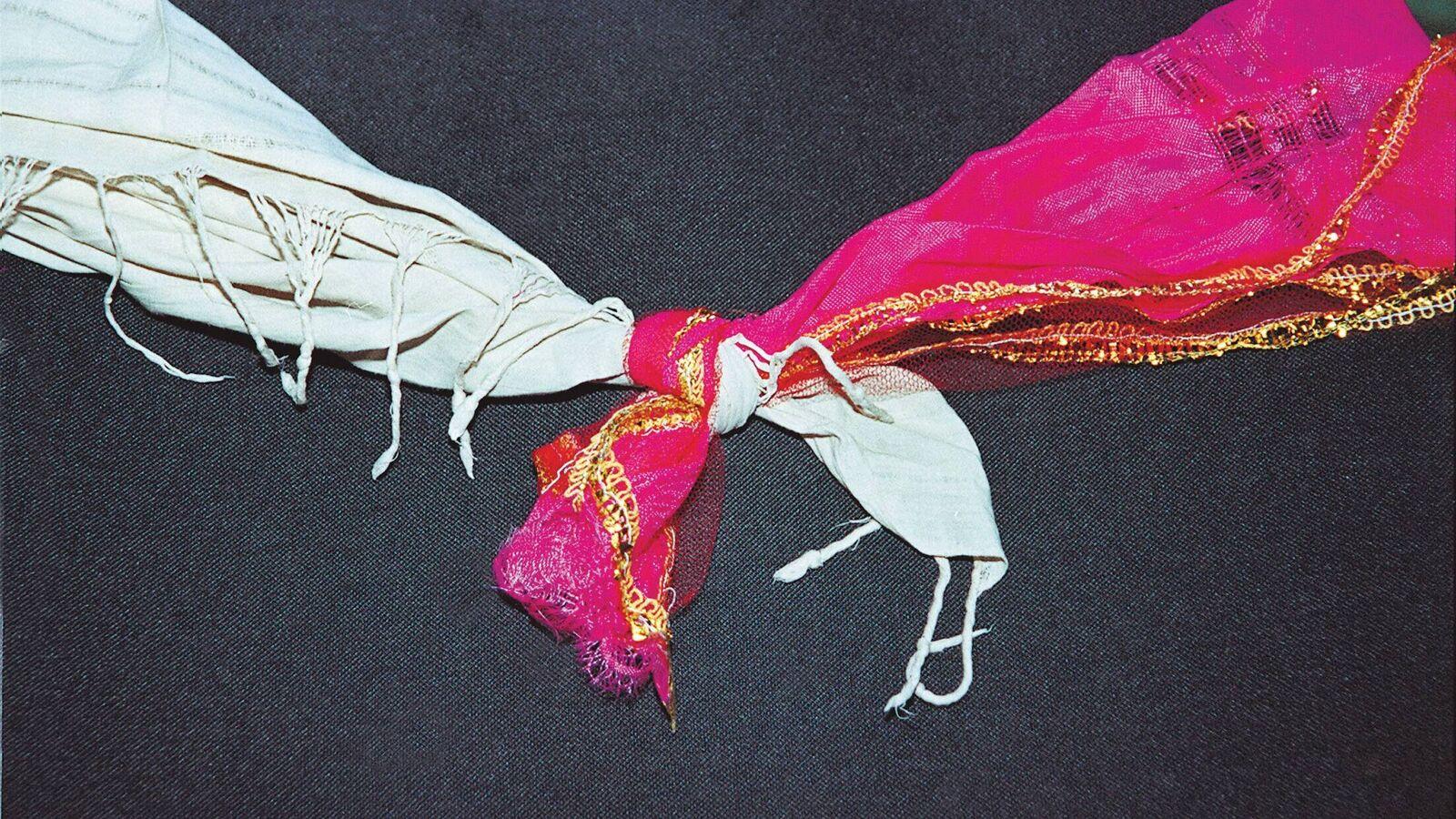
- 10 Feb 2024
Why is it in the News?
The Uttarakhand Legislative Assembly recently passed the Uniform Civil Code (UCC) Bill, 2024 after a two-day discussion. The Bill brings uniformity in personal laws, governing things such as marriage, divorce, and inheritance, across communities in the state (excluding tribals).
What is Polygamy?
- Polygamy involves the practice of having multiple spouses simultaneously, which can include either wives or husbands.
- It manifests in two primary forms:
- Polygyny, where a man is married to several women concurrently, and
- Polyandry, where a woman is married to multiple men concurrently.
Who can have "multiple wives"?
- Under Hindu law, which applies to Hindus, Sikhs, Jains, and Buddhists, the practice of polygamy is prohibited.
- Individuals governed by Hindu law can face criminal proceedings under Sections 494 and 495 of the Indian Penal Code.
- The Special Marriage Act, as well as Christian and Parsi laws, also outlaw bigamy.
- However, the Shariat Protection Act exempts Muslims in India from the ban on polygamy.
- Additionally, due to the protection granted to cultural practices of scheduled tribes, polygynous marriages can be found in tribal groups across northeastern states, Odisha, Telangana, and other regions.
- Courts have had to face cases where a man converted to Islam from other religions to marry a second wife.
- While the Supreme Court, in its 1994 Sarla Mudgal verdict, declared that conversion solely for a second marriage is invalid, the Law Commission reports from 1961 and 2009 have emphasized the need to clarify the legal position of the "second wife" in a converted Muslim marriage and address the rights of any children born from such a union.
What does the data say?
- Government data on polygamy can be obtained from two main sources — the decadal census and the National Family Health Survey (NFHS). Both have certain limitations.
- The census does not directly collect data on polygamy.
- Rather its incidence is inferred from the difference in the number of married men and the number of married women in the country.
- More married women than men point to the prevalence of situations where men have married more than once.
- Rather its incidence is inferred from the difference in the number of married men and the number of married women in the country.
What does the census data say?
- According to the census of 2011, there are 28.65 crore married men in India, compared to 29.3 crore married women.
- The difference between the two numbers — 65.71 lakh — can be explained either by the incidence of polygamy or men going abroad.
- The highest discrepancy in the population of married men and women can be found among Hindus (who make up the largest number of Indians), followed by Muslims, Sikhs, Christians, Sikhs, and Buddhists.
- However, when compared to their respective shares in the total population, Muslims and Christians report the greatest difference.
What does NFHS data say?
- The NFHS-5 showed the prevalence of polygamy (the percentage of women who reported their husbands had other wives) was highest among Christians (2.1%), followed by Muslims (1.9%), and Hindus (1.3%), looking at religion.
- Overall, Scheduled Tribes reported the highest incidence at 2.4%.
- A June 2022 study by the International Institute of Population Sciences (IIPS) showed that polygynous marriages (one man married to more than one woman at a time) have decreased from 1.9% in 2005-06 to 1.4% in 2019-21, among the whole population.
- Buddhists, who reported a 3.8% incidence of polygyny in 2005-06, saw the sharpest dip of 65.79% to 1.3% in 2019-21.
- The incidence of polygyny in the total population fell by 26.31%.
Constitutional Perspective and Supreme Court's Insights:
- India, as a secular state, upholds the principle of equality among religions, ensuring that no religion holds superiority or inferiority over another.
- The Indian Constitution guarantees fundamental rights to all citizens, and any legislation conflicting with these rights is considered unconstitutional.
- Article 13 of the Constitution invalidates any law inconsistent with Part III of the Constitution.
- Article 14 ensures equal treatment and protection under the law for every individual within India's territory.
- In a 2021 verdict, the Supreme Court highlighted India's recognition of a plural legal system, allowing different religious communities to abide by distinct 'personal laws.'
- However, these personal laws must adhere to constitutional validity and morality, ensuring they do not infringe upon Articles 14, 15, and 21 of the Constitution.
Bharat Ratna for former PMs Charan Singh and PV Narasimha Rao, scientist Swaminathan (Indian Express)
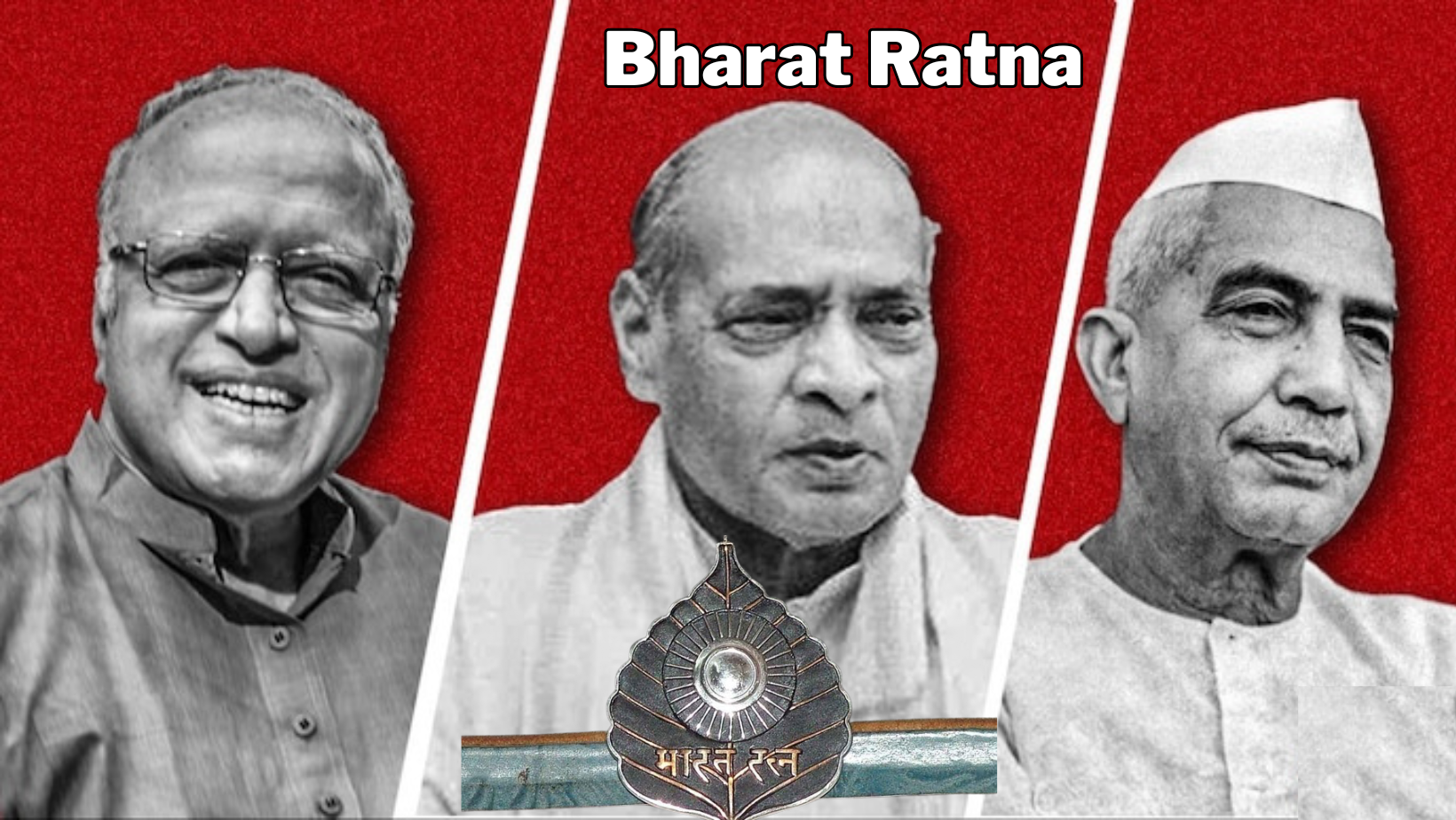
- 09 Feb 2024
Why is it in the News?
The Union government on February 9, 2024, announced former Prime Ministers Chaudhary Charan Singh, P.V. Narasimha Rao and agriculture scientist M.S. Swaminathan will be honoured with the country’s highest civilian honour, the Bharat Ratna posthumously.
News Summary:
- The government recently conferred the Bharat Ratna for former Prime Ministers Chaudhary Charan Singh and PV Narasimha Rao and agricultural scientist MS Swaminathan, who is known for his leading role in India's 'Green Revolution', posthumously.
- Earlier, the government had announced Bharat Ratna, for veteran BJP politician LK Advani and socialist icon and former Bihar Chief Minister Karpoori Thakur.
Who was PV Narasimha Rao?
- Pamulaparthi Venkata Narasimha Rao (28 June 1921 – 23 December 2004) was a lawyer and a towering Congress leader in undivided Andhra Pradesh, who became the 9th prime minister of India.
- He ruled the country between 1991 and 1996.
- In 1991, when India was facing a foreign reserves crisis, Narasimha Rao's government brought about three big-ticket economic reforms -- globalisation, liberalisation and privatisation.
- PV Narasimha Rao was the first person from South India to become the prime minister of India.
- He was born in a Telugu Niyogi Brahmin family in the Laknepalli village of Narsampet mandal, Warangal.
- The district is currently in Telangana.
- He was a freedom fighter who took part in Hyderabad's Vande Mataram movement in the late 1930s.
- After Independence, PV Narasimha Rao became a full-time politician.
- He was elected as an MLA for the first time in 1957.
- Till 1971, he assumed many ministerial positions in the state government. He became the chief minister of Andhra Pradesh in 1971.
- He was known as an Indira Gandhi loyalist and supported her in 1969 when the Congress vertically split into two parts.
- Rao also served as a member of parliament from Andhra Pradesh and handled home, defence and foreign affairs portfolios as a central minister.
- In 1991, he had almost retired, however, he came back to active politics after the assassination of Congress President and Prime Minister Rajiv Gandhi's assassination.
- He was also the first Congress PM outside the Nehru-Gandhi family.
- He broke several conventions as the prime minister.
- He appointed economist Manmohan Singh as his finance minister.
- Together, they brought about economic reforms.
Who was Chaudhary Charan Singh?
- Chaudhary Charan Singh was born in a middle-class farmer family in Meerut in 1902.
- He started his political career with the Congress.
- He was first elected to the Uttar Pradesh assembly in 1937 from Chhaprauli and later got re-elected in 1946, 1952, 1962 and 1967.
- Chaudhary Charan Singh was appointed as a parliamentary secretary in Govind Ballabh Pant's government in 1946.
- He worked in several departments before being appointed a cabinet minister for justice and information in 1951.
- In 1967, he quit the Congress and became the chief minister of Uttar Pradesh for the first time after being elected as the leader of the Sanyukta Vidhayak Dal coalition.
- He became the chief minister for the second time in 1970.
- In 1979 after the Jana Sangh (BJP's predecessor) pulled out of the 18-month-old Morarji Desai-led Janata Party government.
- Congress (I) decided to extend support to Chaudhary Charan Singh who took oath as prime minister on July 28, 1979.
- But before he could prove his majority in the Lok Sabha, Indira Gandhi withdrew support to his government and Singh resigned.
- He continued to remain as caretaker PM till January 14, 1980.
Who was MS Swaminathan?
- M.S. Swaminathan is an eminent Indian agricultural scientist and geneticist hailed as the "Father of the Green Revolution" in India.
- Born on August 7, 1925, Swaminathan's groundbreaking research and advocacy have significantly contributed to India's agricultural development and food security.
- He played a crucial role in introducing high-yielding varieties of wheat and rice, which revolutionized agricultural productivity in the country during the 1960s and 1970s.
- Swaminathan has received numerous awards and honours for his contributions to agriculture and sustainable development, and he continues to be a leading voice in global efforts to address food security and environmental sustainability.
Pradhan Mantri Matsya Kisan Samridhi Sah-Yojana (PM-MKSSY) (PIB)
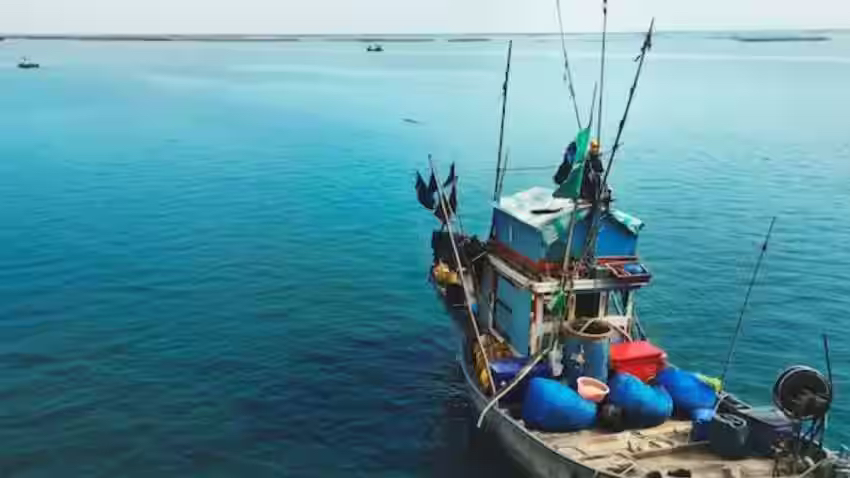
- 09 Feb 2024
Why is it in the News?
Recently, the Union Cabinet approved the Pradhan Mantri Matsya Kisan Samridhi Sah-Yojana (PM-MKSSY), a sub-scheme under the Pradhan Mantri Matsya Sampada Yojana.
About Pradhan Mantri Matsya Kisan Samridhi Sah-Yojana:
- Implemented as a Central Sector Sub-scheme within the broader framework of the PMMSY, this initiative aims to bolster the fisheries sector.
- Funding: With an estimated outlay of Rs. 6,000 crore, the scheme comprises 50% public finance, including contributions from the World Bank and the AFD, and the remaining 50% anticipated investment from beneficiaries and the private sector.
- Duration: Operational for four years from FY 2023-24 to FY 2026-27, spanning all States and Union Territories.
Intended Beneficiaries:
- Fishers, Fish (Aquaculture) Farmers, Fish workers, Fish Vendors or such other persons directly engaged in the fisheries value chain.
- Micro and Small enterprises in the form of Proprietary Firms, Partnership Firms and Companies registered in India, Societies, Limited Liability Partnerships (LLPs), Cooperatives, Federations, Village Level Organizations like Self Help Groups (SHGs), Fish Farmers Producer Organizations (FFPOs) and Startups engaged in fisheries and aquaculture value chains.
- FFPOs also include Farmer's Producer Organizations (FPOs).
- Any other beneficiaries that may be included by the Department of Fisheries, Gol as targeted beneficiaries.
Aims and objectives of PM-MKSSY:
- Gradual Formalization of the unorganized fisheries sector through self-registration of fishers, fish farmers and supportive workers under a National Fisheries Sector Digital Platform including the creation of work-based digital identities of fish workers for improved service delivery.
- Facilitating access to institutional financing fisheries sector micro and small enterprises.
- Providing a one-time incentive to beneficiaries for purchasing aquaculture insurance.
- incentivising fisheries and aquaculture microenterprises through performance grants for improving fisheries sector value-chain efficiencies including the creation and maintenance of jobs.
- Incentivising micro and small enterprises through performance grants for the adoption and expansion of fish and fishery product safety and quality assurance systems including the creation and maintenance of jobs.
What is a White Paper in Economics? Types and Main Purpose (Indian Express)
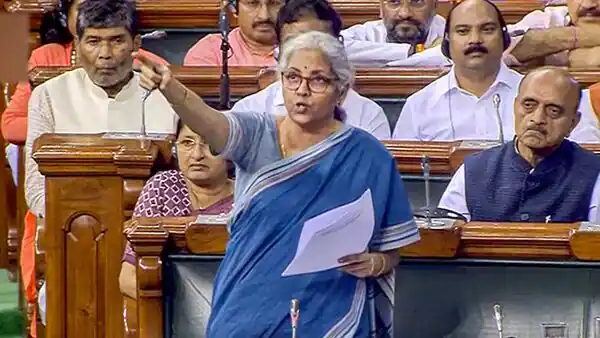
- 09 Feb 2024
Why is it in the News?
Finance Minister Nirmala Sitharaman presented a “white paper” on the Indian economy in Parliament recently.
What is a White Paper?
- A White Paper is a report, guide, research-based paper or formal government document that presents expert analysis about a topic or solution to a problem, or policy proposals, often bound in white covers.
- They have been used historically to introduce new policies or legislation and gauge public reaction to government initiatives, schemes or policies.
Types of White Paper:
- There are three types of white paper Economic White Paper, Budget White Paper, and Policy White Paper.
- Economic White Paper: It contains an analysis of the current state of the economy and talks about the challenges, and opportunities it faces.
- The paper also contains the government’s plans and strategies to address the issues.
- Budget White Paper: A Budget White Paper contains government budgetary priorities, spending schemes, revenue sources, and fiscal projections among other issues.
- Policy White Paper: A Policy White Paper talks about a specific policy, scheme or program of the government to address a particular issue or problem in the economy.
- Economic White Paper: It contains an analysis of the current state of the economy and talks about the challenges, and opportunities it faces.
What is the use of White Paper?
- The purpose of a white paper on the economy is to inform the public, Parliament, and stakeholders about a government's policy, vision, goals, plans, and actions being taken to safeguard the economic interests of the country.
- The document can also be used as a tool for consultation and feedback, as it invites comments and suggestions from various parties on the proposed policies or programs.
- A white paper can also influence public opinion and shape the political debate on economic issues.
Key Insights from the White Paper on the Indian Economy and its Objectives:
- The comprehensive 58-page document is structured into three primary segments.
- Section 1 delves into the macroeconomic landscape during the UPA's 10-year tenure.
- Section 2 presents an overview of various corruption scandals that occurred under the UPA administration.
- Section 3 outlines the strategies employed by the NDA to revitalize the economy.
Objectives of the white paper presented by FM:
- To elucidate the governance, economic, and fiscal challenges inherited by the NDA government upon assuming office in 2014.
- To shed light on the policies and initiatives undertaken by the NDA government since 2014 to rejuvenate the economy.
- To stimulate a more informed discourse on the significance of national interest and fiscal responsibility in governance, transcending political expediency.
Most Important Claims in the White Paper:
- The UPA era was marred by policy missteps and corruption scandals, notably non-transparent auctions of public resources like coal and telecom spectrum.
- In the aftermath of the 2008 Global Financial Crisis, the UPA's pursuit of high economic growth undermined macroeconomic stability, leading to challenges such as high inflation and fiscal deficit.
- Capital expenditure as a percentage of total expenditure declined significantly during the UPA tenure, impeding infrastructure development and economic growth.
- The White Paper highlights improvements under the NDA, including lower inflation rates and enhanced efficacy of schemes like Jan Dhan and Swachh Bharat Mission.
- The NDA government's proactive measures have steered the economy away from crisis, positioning India as one of the top global contributors to growth.
- Overall, the White Paper underscores the NDA's efforts to address economic challenges and foster sustainable growth in India.
What Insights Can We Draw from the Above Assertions?
- Examining the economic performance spanning two decades, especially in consecutive terms, presents a formidable challenge due to the multitude of factors influencing both the economy and its measurement methodologies.
- For example, the significant fluctuations in domestic inflation during the latter years of the UPA administration can largely be attributed to the volatile cost of crude oil.
- During FY12 to FY14, crude oil prices fluctuated between $111 and $105 per barrel, significantly impacting inflation rates. Subsequently, oil prices declined to $84 in FY15 and further to $46 in FY16.
- While the NDA government has achieved noteworthy milestones such as the implementation of GST and IBC, the white paper fails to acknowledge shortcomings within the economy.
- Notably, it overlooks critical issues such as unemployment, and the absence of a formal measure of poverty since 2011 is not addressed.
Kyasanur Forest Disease (KFD) (The Hindu)
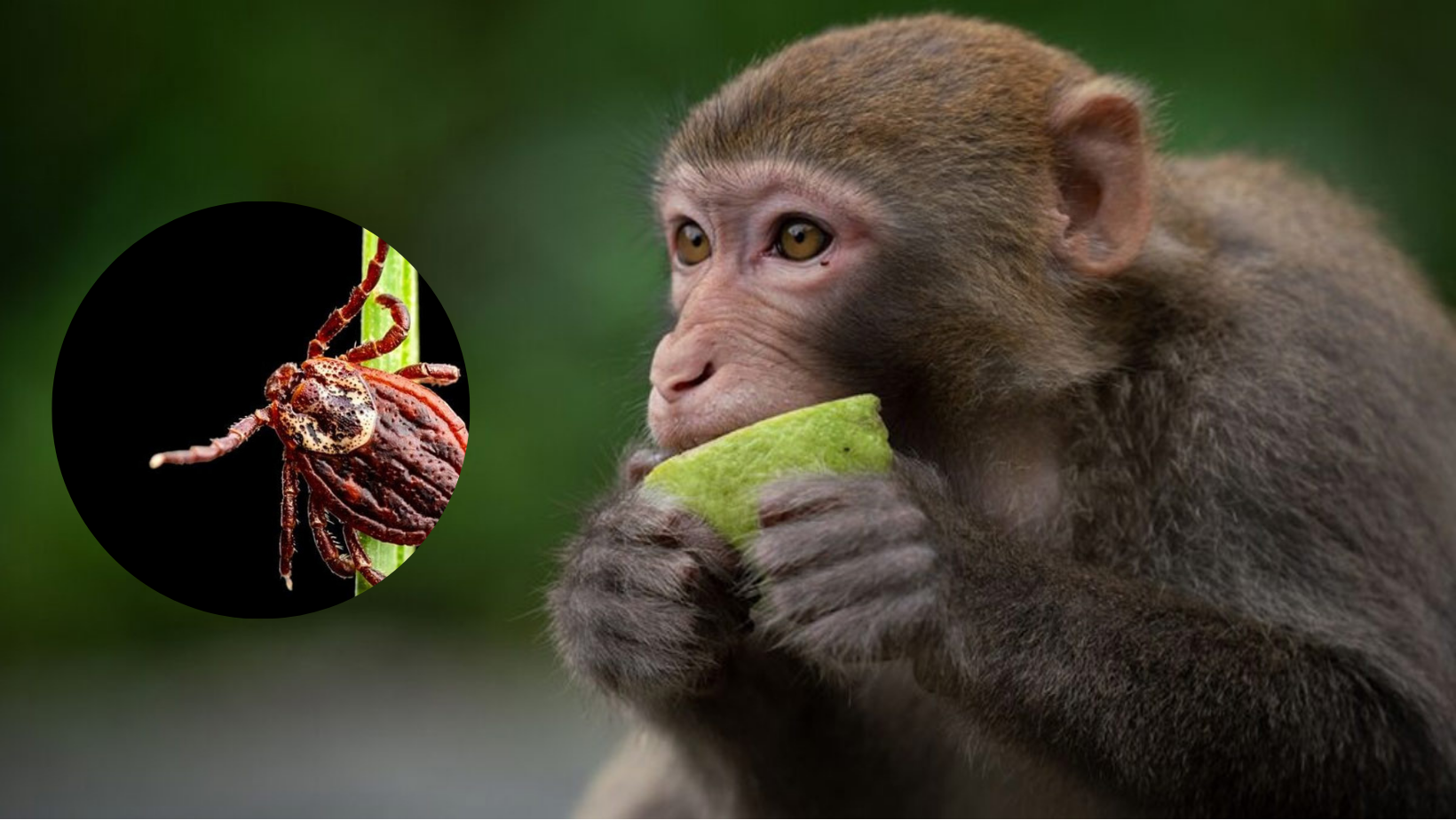
- 09 Feb 2024
Why is it in the News?
Karnataka is currently facing challenges posed by the spread of Kyasanur Forest Disease (KFD), also recognized as monkey fever.
What is KFD?
- The disease was first noticed in the Kysanur Forest area of Sorab Taluk in Shivamogga district in 1956 and was named after the region.
- It is also known as monkey fever, as monkeys also get infected.
- The death of a monkey serves as a warning of a KFD outbreak.
- The scientists concluded that the virus (Flaviviridae virus family) must have been present in the forests of the Malnad region.
- It became active due to ecological changes.
- The disease spreads through ticks.
- Primates that come in contact with infective ticks contract the disease.
- Human beings who visit the forest area either for livelihood, to graze cattle, or to collect firewood contract the disease.
- Normally, the transmission begins from late November to June.
- It peaks between December and March, according to studies.
- A blood test is done to identify if someone has KFD.
Symptoms:
- Symptoms start to appear three to eight days after the bite, of an infective tick.
- The common symptoms are:
- Fever
- Redness of the eyes
- Severe headache, and
- Body pain
- Three to four days after the onset of initial symptoms, the patient may have gastrointestinal symptoms.
- In severe cases, bleeding from the nose is noted.
Treatment:
- There is no specific treatment, doctors handle the symptoms and monitor the vitals daily.
- An attempt to use a vaccine was given up after studies showed it to be ineffective.
- The ICMR is said to be in consultation with Indian Immunologicals for the development of a vaccine.
About 400 Smart Cities Mission Projects are Likely to Miss June 30 Deadline (Indian Express)

- 09 Feb 2024
Why is it in the News?
Recently, the Union Housing and Urban Affairs Secretary Manoj Joshi told the Parliamentary Standing Committee on Housing and Urban Affairs that Some projects under the Smart Cities Mission would not be able to meet the June 30 deadline and the respective state governments would be responsible for completing them thereafter.
Key Highlights of the Report:
- Approximately 400 Smart City Mission (SCM) projects are facing challenges in meeting the extended deadline of June 2024, according to a recent report by the Parliamentary committee.
- These projects, being implemented by around ten cities under the Center's flagship SCM, are at risk of not being completed within the timeframe.
- The Ministry of Housing and Urban Affairs (MoHUA) has granted a second extension to the Smart Cities Mission, giving it until June 2024 to finalize pending work.
- However, if these projects are not completed by then, the respective state governments will be responsible for completing them at their own expense.
- The role of the ministry extends beyond merely transferring funds; it also involves overseeing project execution and ensuring successful completion.
- Despite the challenges, the ministry has emphasized that there will be no further extensions to the mission.
- Delays have been attributed to various factors, including difficulties in relocating local populations, legal hurdles such as land procurement issues, frequent turnover of smart cities' CEOs, and delays in projects requiring coordination with other government entities.
- In light of these challenges, the committee has proposed extending the Smart Cities Mission to Tier-2 cities located within 50-100 km of capital cities and tourist destinations.
- Additionally, the committee has highlighted the importance of protecting privacy rights, especially given the extensive deployment of surveillance technology like CCTV cameras and Integrated Command and Control Centers across all 100 cities involved in the mission.
What is the Smart Cities Mission (SCM)?
- The Smart Cities Mission (SCM) was initiated on 25th June 2015, to foster urban centers that offer essential infrastructure and a sustainable, clean environment.
- Through a competitive process spanning from 2016 to 2018, 100 cities were selected for development as Smart Cities, each receiving five years from their selection to complete designated projects.
- Administered as a Centrally Sponsored Scheme under the Union Ministry of Housing and Urban Affairs (MoHUA), the program entails financial support from the Central Government amounting to Rs. 48,000 crores over five years, equating to an average of Rs. 100 crore per city per year, matched by an equivalent contribution from the State or Urban Local Body (ULB).
- Guided by six core principles, the Smart Cities initiative aims to enhance the quality of life for residents through the implementation of innovative solutions, fostering economic growth, and addressing social, economic, physical, and institutional aspects of urban development. It prioritizes sustainable and inclusive progress, endeavouring to establish scalable models that can serve as beacons for other cities aspiring for advancement.
- Financing for the Smart Cities Mission entails shared responsibilities between the Central Government, state governments, and ULBs, requiring equal contributions for project implementation.
- As of December 1, 2023, significant progress has been made, with 6,419 projects worth Rs. 1,25,105 crore completed out of a total of 7,970 projects valued at Rs. 1,70,400 crore.
- An additional 1,551 projects worth Rs. 45,295 crore are currently in progress, though certain cities, particularly those in the North-Eastern and Himalayan regions, as well as small Union Territories, face challenges in keeping pace.
- Budget allocations for the Smart Cities proposal have seen adjustments, with a reduction in the outlay from Rs. 7,634 crores to Rs. 7,535 crores in the revised budget for 2023-24, and a further decrease to Rs. 2,236 crores for the 2024-25 fiscal year.
Prithvi Vigyan Scheme to Bolster Earth Science Research Approved by Cabinet (Indian Express)
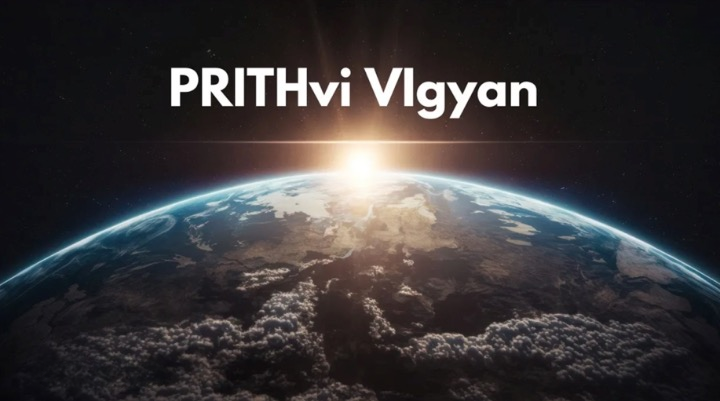
- 08 Feb 2024
Why is it in the News?
The Union Cabinet has approved a Rs 4,797 crore research scheme to boost and maintain research momentum in the fields of ocean, atmospheric and polar sciences.
What is PRITHvi VIgyan (PRITHVI)?:
- The PRITHvi VIgyan (PRITHVI) will be an umbrella scheme spearheaded by the Ministry of Earth Sciences to help continue many of the ongoing research projects covering the period from 2021 to 2026.
- This scheme encompasses five existing sub-schemes:
- Atmosphere & Climate Research-Modelling Observing Systems & Services (ACROSS)
- Ocean Services, Modelling Application, Resources and Technology (O-SMART)
- Polar Science and Cryosphere Research (PACER)
- Seismology and Geosciences (SAGE)
- Research, Education, Training and Outreach (REACHOUT)
- The principal objectives of the comprehensive PRITHVI Scheme are as follows:
- Enhancing and maintaining long-term observations across the atmosphere, hydrosphere, geosphere, cryosphere, and biosphere to monitor critical indicators of the Earth System and its changes.
- Developing modelling systems to comprehend and forecast weather patterns, ocean dynamics, and climate-related hazards, while advancing the understanding of climate change science.
- Exploring the polar and high seas regions to uncover new phenomena and resources.
- Innovating technology for the exploration and sustainable utilization of oceanic resources benefits society at large.
- Translating insights from Earth systems science into services that contribute to societal well-being, environmental preservation, and economic prosperity.
- This scheme is poised to foster the development of integrated, multidisciplinary earth science research and innovative initiatives across various institutes under the MoES umbrella.
Significance of the PRITHVI Scheme:
- Under the PRITHVI Scheme, the Ministry of Earth Sciences (MoES) plays a pivotal role in delivering vital services concerning weather, climate, oceanography, coastal conditions, hydrology, seismology, and natural hazards.
- These services play a crucial role in issuing forecasts, warnings, and alerts for a wide array of natural disasters, including tropical cyclones, floods, tsunamis, and earthquakes.
- By facilitating disaster preparedness and risk mitigation, they contribute significantly to safeguarding lives and property.
- Earth System Sciences encompass a comprehensive study of the interconnected components of the Earth, including the atmosphere, hydrosphere, geosphere, cryosphere, and biosphere, along with their intricate interactions.
- The PRITHVI Scheme is designed to address these components comprehensively, enhancing our understanding of Earth System Sciences and delivering dependable services for the nation's benefit.
- Through integrated research and development endeavours across diverse MoES institutes, the scheme is poised to tackle major challenges in weather forecasting, climate science, oceanography, cryospheric studies, and seismology.
- These efforts aim to explore sustainable methods for harnessing both biological and non-biological resources, ensuring responsible utilization of our planet's resources.
Support to Students for Participating in Competitions Abroad (SSPCA) Initiative (India Today)

- 08 Feb 2024
Why is it in the News?
The All India Council for Technical Education (AICTE) recently introduced a scheme named 'Support to Students for Participating in Competitions Abroad' (SSPCA).
About the Support to Students for Participating in Competitions Abroad (SSPCA) Initiative:
- The SSPCA Initiative, spearheaded by the All India Council for Technical Education (AICTE), aims to enhance the global competitiveness of Indian students in technical education.
- Crafted to provide financial backing to students aspiring to excel in international scientific events, the initiative offers a comprehensive support system.
Financial Assistance and Mentorship:
- Under the SSPCA scheme, individual students or student teams can avail themselves of travel grants to engage in international competitions.
- This assistance encompasses financial aid, mentorship, logistical support, and networking opportunities, empowering students to effectively represent India on the global stage.
- Financial aid extended by the AICTE scheme amounts to up to Rs 2 lakh per student, covering various expenses such as international and domestic travel, registration fees, visa applications, accommodation, airport taxes, travel insurance, and equipment costs associated with the competition.
Eligibility:
- Eligibility for the SSPCA initiative extends to students enrolled in diploma, B.E./B. Tech, integrated M. Tech, and M./M. Tech programs in AICTE-approved institutions.
- Each team of students is entitled to financial support under the scheme once during the course of their study.
About the All India Council for Technical Education (AICTE):
- Established as the statutory body and national-level council for technical education in India, the AICTE has played a pivotal role in shaping the landscape of technical education in the country.
- Founded in 1945 as an advisory body, it gained statutory status through an Act of Parliament in 1987.
Functions:
- The AICTE is responsible for granting approval for the establishment of new technical institutions, the introduction of new courses, and variations in intake capacity.
- It sets and upholds norms and standards for technical institutions to ensure quality development.
- Additionally, the AICTE promotes technical education through various schemes aimed at fostering innovation, faculty development, research and development, and inclusivity for women, the handicapped, and marginalized sections of society.
- Technical institutions under the AICTE's purview encompass a wide array of programs, including post-graduate, undergraduate, and diploma courses across multiple disciplines.
- Headquartered in New Delhi, the AICTE continues to be at the forefront of advancing technical education and innovation in India.
World Sustainable Development Summit 2024 (TERI)
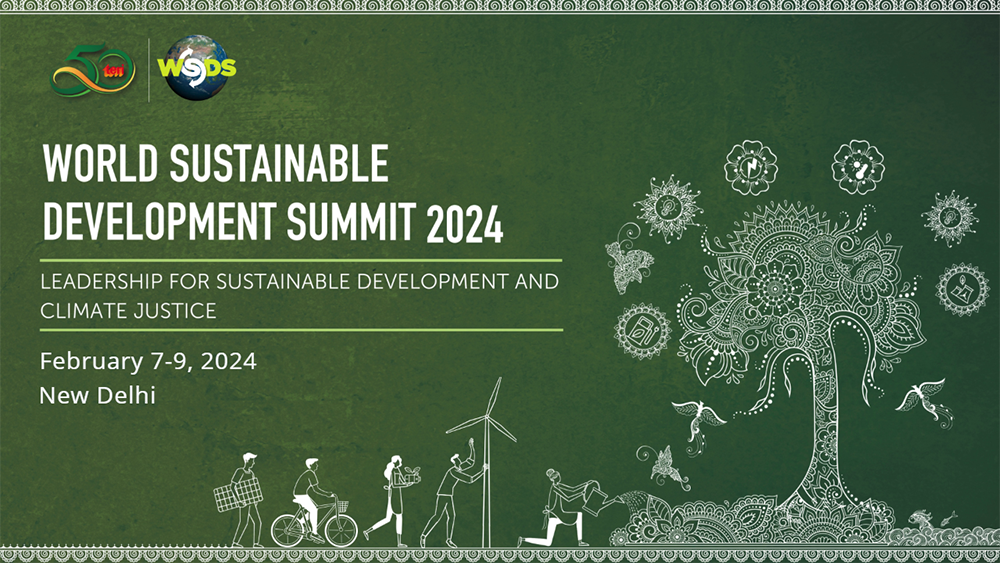
- 08 Feb 2024
Why is it in the News?
Vice-President Jagdeep Dhankhar inaugurated the World Sustainable Development Summit in New Delhi recently in the presence of Prime Minister of Guyana Mark Phillips.
About the World Sustainable Development (WSDS) Summit:
- The WSDS Summit, organized annually by The Energy and Resources Institute (TERI), stands as a flagship event in the realm of sustainable development.
- Instituted in 2001, the Summit series boasts a distinguished legacy spanning over two decades, dedicated to advancing 'sustainable development' as a universally embraced objective.
- Distinguished as the sole independently convened international summit on sustainable development and environment originating from the Global South, the WSDS endeavours to forge enduring solutions for the global community.
- It achieves this by convening the world's foremost leaders and intellectuals on a singular platform.
- The upcoming WSDS 2024 marks the 23rd edition of this significant summit, revolving around the theme 'Leadership for Sustainable Development and Climate Justice'.
Key Facts about The Energy and Resources Institute (TERI):
- TERI stands as a premier think tank committed to conducting research aimed at fostering sustainable development in India and across the Global South.
- Established in 1974 as an information centre focusing on energy issues, TERI expanded its scope to encompass multifaceted research, policy analysis, consultancy, and implementation initiatives.
- TERI's research endeavours, commencing in the late 1980s, are rooted in its steadfast belief that the efficient utilization of energy and sustainable management of natural resources are indispensable for developmental progress.
- Across various sectors, TERI concentrates its efforts on:
- Promoting the efficient utilization of resources
- Enhancing access to and adoption of sustainable practices and inputs
- Mitigating environmental and climate impacts
- TERI's headquarters are located in New Delhi, serving as a hub for its diverse activities and initiatives.
Lok Sabha passes Finance Bill (Indian Express)
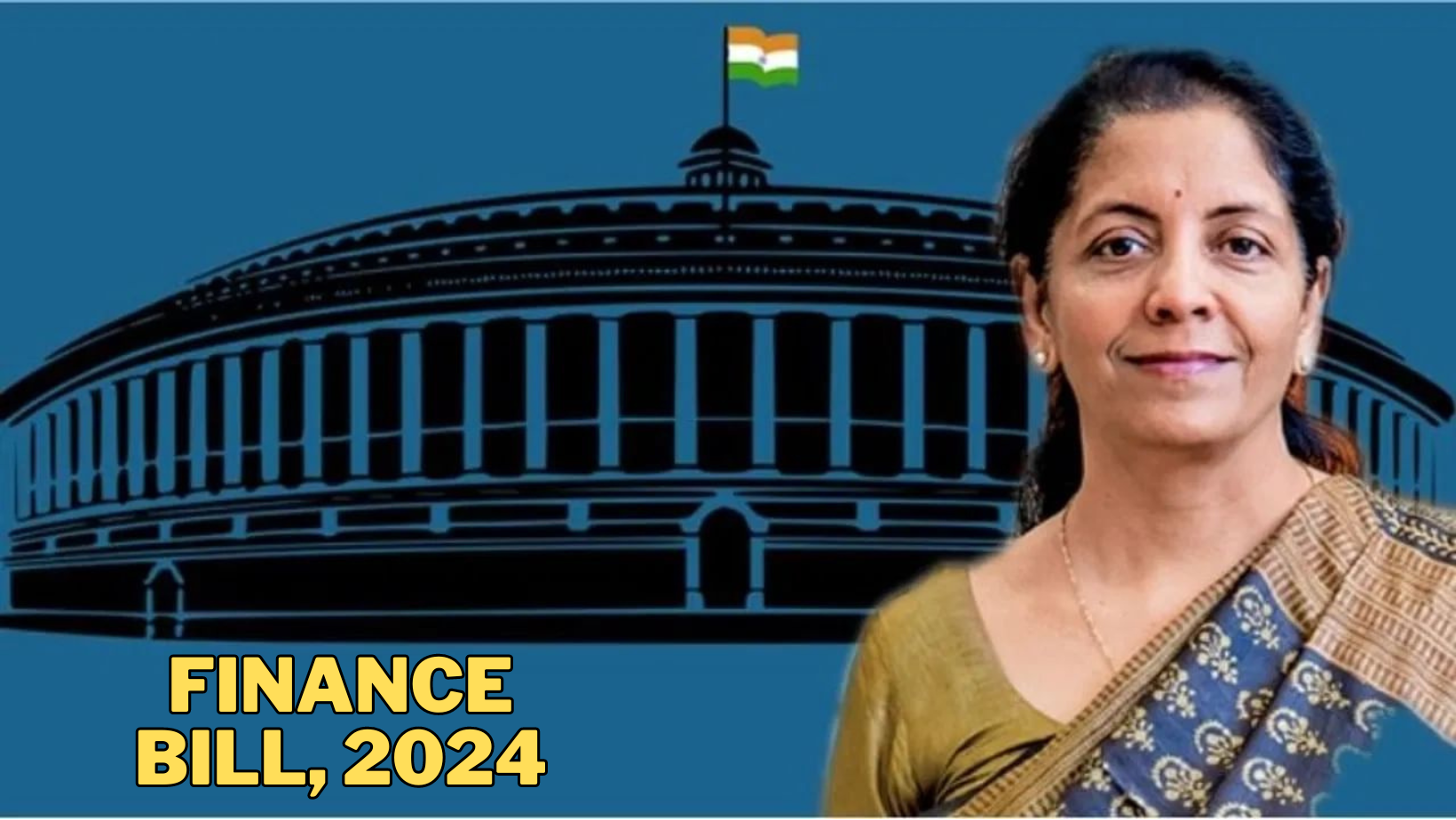
- 08 Feb 2024
Why is it in the News?
The Lower House of Parliament recently passed the Finance Bill moved by Union Finance Minister Nirmala Sitharaman.
Context:
- The Lok Sabha passed the Finance Bill, 2024 by voice vote recently.
- Also, the House passed the Appropriation Bill, granting authorization for government expenditures for four months in the upcoming fiscal year.
- The Appropriation Bill is a significant legislative measure that empowers the government to utilize public funds allocated in the annual budget.
- It serves to uphold accountability and transparency by necessitating parliamentary approval for expenditures and prevents unauthorized withdrawals from the Consolidated Fund of India.
- Furthermore, the lower house sanctioned the Rs 1.8 lakh crore budget for the Union Territory of Jammu and Kashmir.
What is a Finance Bill?
- The Finance Bill, classified as a Money Bill under Article 110 of the Constitution, is an annual presentation in the Lok Sabha following the Union Budget announcement.
- It encapsulates the government's fiscal proposals concerning taxation, expenditure, and other financial affairs.
- Through this bill, the government submits its proposals for imposing new taxes, altering the existing tax framework, or extending the current tax structure beyond the approved period to Parliament.
- Accompanied by a Memorandum elucidating its provisions, the Finance Bill is exclusively introduced in the Lok Sabha, though amendments can be recommended by the Rajya Sabha.
- Approval from both houses of Parliament is requisite for the bill to become law, with a mandate for passage within 75 days of its introduction.
- While all Money Bills fall under the category of Financial Bills, not all Financial Bills qualify as Money Bills.
- For instance, a Finance Bill solely focusing on tax proposals is classified as a Money Bill.
- Conversely, a Bill addressing taxation or expenditure alongside other subjects is categorized as a Financial Bill.
- Thus, if a Bill entails government expenditure along with other matters, it is designated as a financial bill.
Highlights of the 2024 Finance Bill:
- Stability in Income Tax: With the impending general elections in April-May 2024, the bill prioritizes continuity by retaining the current tax framework for the fiscal year 2024-2025.
- Targeted Relief Measures: Incorporates slight tax concessions tailored to particular sectors or taxpayer groups.
- Promotion of Economic Expansion: Encompasses provisions aimed at fostering infrastructure enhancement, investment stimulation, and streamlining business operations.
- Fiscal Discipline: Pursues fiscal consolidation objectives through proposed strategies to manage expenditures or enhance revenue generation.
Extending the Retirement Age of Supreme Court and High Court Judges (Indian Express)
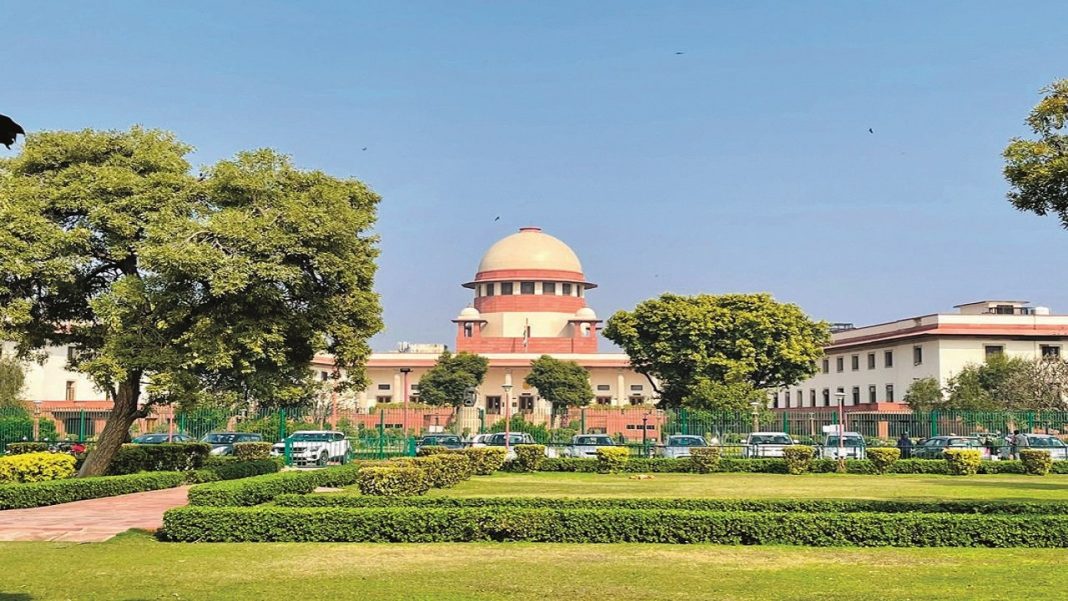
- 08 Feb 2024
Why is it in the News?
The government has told a parliamentary panel that extending the retirement age of Supreme Court and High Court judges based on their performance may not be practical.
Key Insights from the Report on Judicial Processes and Reform:
- On August 07, 2023, the Standing Committee on Personnel, Public Grievances, and Law and Justice, chaired by Mr. Sushil Kumar Modi, presented its findings.
- Among its significant findings and recommendations, the Committee emphasized the necessity of raising the retirement age for judges.
- They highlighted the importance of aligning this age with advancements in medical sciences and increased life expectancy.
- At present, Supreme Court (SC) and High Court (HC) judges retire at 65 and 62 years, respectively.
- The Committee proposes amending relevant Articles (124 and 217) of the Constitution to extend these retirement ages.
- The retirement age of the High Court Judges was increased from 60 to 62 years, after the 15th constitutional Amendment according to section 4 of the Constitutional Act 1963.
- Furthermore, the Committee suggests implementing a system of appraisal by the SC Collegium to assess judges' performance and health conditions, as well as the quality and quantity of judgments delivered, before extending their tenure.
Debate Regarding the Retirement Age for Supreme Court (SC) and High Court (HC) Judges:
- Retiring SC judges have frequently reflected on their time in office, often feeling that their tenure didn't allow them sufficient opportunity to make meaningful contributions to the judiciary.
- In 2022, former Chief Justice of India (CJI) N.V. Ramana engaged in a dialogue with Justice Stephen Breyer of the US Supreme Court, who chose to retire at age 83 after serving for 27 years.
- Expressing his views, CJI Ramana, who was scheduled to retire after 8.5 years on the SC bench, remarked that 65 seemed 'too early an age for retirement.'
- Despite this, CJI Ramana's tenure surpassed that of most other SC judges.
- Among the current 32 Judges of the SC, only CJI Chandrachud, and Justices J.B. Pardiwala, K.V. Viswanathan, and Dipankar Datta are expected to exceed the 8-year mark.
- These judges represent a minority who surpass the average tenure of sitting SC judges, which stands at 5.4 years.
Why is the Government Resistant to Elevating the Retirement Age for SC and HC Judges?
- The government asserts that raising the retirement age for Supreme Court (SC) and High Court (HC) judges might lead to potential issues of favouritism.
- They argue that such a move would grant excessive authority to the SC Collegium, potentially diminishing parliamentary oversight in evaluating judges for tenure extensions.
- Additionally, the government expresses concerns that this change could subject judges to external pressures, compromising their ability to maintain impartiality.
- Moreover, they highlight the strain it would place on the already limited human resources within the Judiciary and the Executive involved in the appointment process.
Additional Insights from the Report on Judicial Processes and Reform:
- Establishment of Regional SC Benches: The Committee highlighted the challenge faced by litigants from distant regions due to the centralized nature of the Supreme Court in Delhi.
- They proposed leveraging Article 130 to create regional benches in four or five locations.
- These regional benches would handle appellate matters, while constitutional issues would remain under Delhi's jurisdiction.
- Enhancing Social Diversity in Judicial Appointments: Recognizing a diversity deficit in the higher judiciary, the Committee pointed out the low representation of marginalized communities.
- They noted that since 2018, only a small percentage of High Court judges belonged to Scheduled Castes and Scheduled Tribes.
- To address this, the Committee recommended that the Supreme Court and High Court Collegiums prioritize the nomination of women and candidates from marginalized communities, including minorities.
- Implementation of Mandatory Asset Declaration: While constitutional functionaries and government servants are obligated to declare their assets annually, judges are exempt from this requirement.
- The Committee urged the central government to enact legislation mandating higher judiciary judges to disclose their assets and liabilities each year to the appropriate authority.
- Revision of Vacation Practices in SC and HCs: The Committee observed that simultaneous vacations for the entire court contribute to case backlog and inconvenience for litigants.
- They proposed a staggered vacation system, wherein judges take leave at different times throughout the year, to mitigate this issue.
- Publication of Annual Reports by HCs: Presently, only a few High Courts publish annual reports, unlike the Supreme Court, which regularly issues its report.
- The Committee recommended that the Department of Justice collaborate with the Supreme Court to ensure that all High Courts prepare and publish their annual reports, promoting transparency and accountability in judicial operations.
Rajya Sabha passes Bills to add PVTGs of Odisha, A.P. in ST lists (Indian Express)
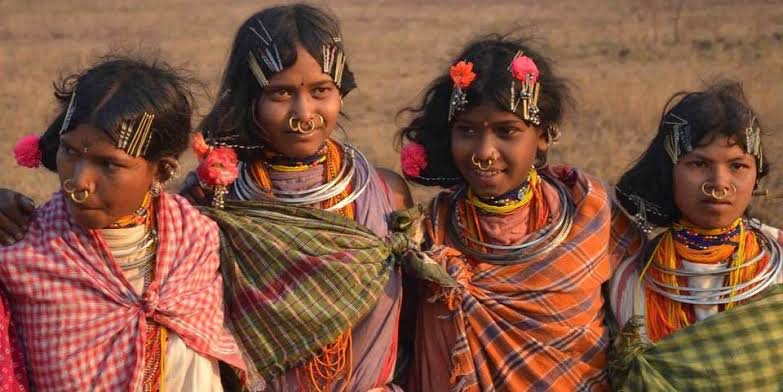
- 07 Feb 2024
Why is it in the News
The Rajya Sabha recently passed two Bills, which seek to modify the list of Scheduled Castes and Scheduled Tribes in Odisha and Andhra Pradesh.
News Summary:
- The Rajya Sabha recently approved the Constitution (STs) Order Amendment Bill 2024 and the Constitution (SCs and STs) Order Amendment Bill 2024, introduced by the Ministry of Tribal Affairs.
- This development paves the path for the inclusion of numerous new communities in the Scheduled Tribes (STs) list of Odisha, along with the incorporation of synonyms and phonetic variations of existing tribes in the ST lists of both Andhra Pradesh and Odisha.
About the Legislation:
- The recently passed bills introduced notable changes to the Scheduled Tribes (STs) lists of Odisha and Andhra Pradesh, particularly focusing on the inclusion of seven Particularly Vulnerable Tribal Groups (PVTGs), a subset of STs, with four additions in Odisha and three in Andhra Pradesh.
- In Odisha, the PVTGs added include:
- Pauri Bhuyan and Paudi Bhuyan as synonyms of the Bhuyan tribe.
- Chuktia Bhunjia as a synonym of the Bhunjia tribe.
- Bondo as a sub-tribe of the Bondo Poraja tribe.
- Mankidia as a synonym for the Mankirdia tribe.
- In Andhra Pradesh, the PVTGs added are:
- Bondo Porja and Khond Porja as synonyms of the Porja tribe.
- Konda Savaras as a synonym for the Savaras tribe.
- These additions mark a significant step as these groups, belonging to PVTGs, have been included in the scheduled list after 75 years of independence.
Additional Changes:
- Apart from these additions, the bills also facilitated changes in Odisha's ST list, including the relocation of two entries, Tamadia and Tamudia, from the Scheduled Castes list to the Scheduled Tribes list.
- Furthermore, synonyms, phonetic variations, and sub-tribes of at least eight existing communities in Odisha's ST list were added through the bill.
- Expanding Odisha's ST list, the bills introduced two new entries:
- The Muka Dora community (and synonyms) in undivided Koraput District, which comprises Koraput, Nowrangapur, Rayagada, and Malkangiri districts.
- The Konda Reddy (and synonyms) community.
Who are Particularly Vulnerable Tribal Groups (PVTGs)?
- Particularly Vulnerable Tribal Groups (PVTGs), as defined by the Ministry of Tribal Affairs (MoTA), comprise 75 distinct tribal communities in India.
- These groups are characterized by:
- Pre-agriculture level of technology,
- Stagnant or declining population trends,
- Extremely low literacy rates, and
- Subsistence level of economy.
- PVTGs were identified as a separate category based on the recommendations of the 1961 Dhebar Commission. Initially, there were 52 PVTGs, and over time, the list has expanded to include 75 groups across 18 states and Union Territories.
- According to data from the MoTA and the 2011 Census, Odisha has the largest population of PVTGs, with 8.66 lakh individuals, followed by Madhya Pradesh with 6.09 lakh and Andhra Pradesh (including Telangana) with 5.39 lakh.
- Overall, the total PVTG population exceeds 40 lakh, with Odisha's Saura community being the largest PVTG, numbering 5.35 lakh individuals.
SAMARTH Centers (PIB)
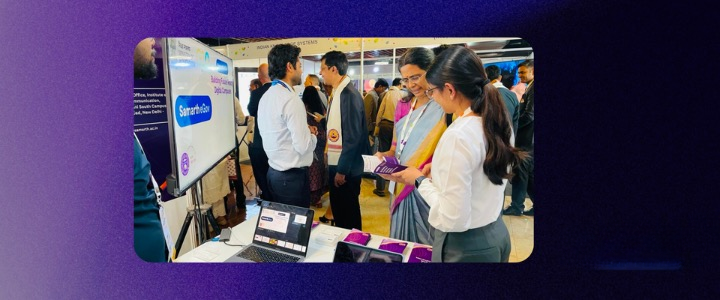
- 07 Feb 2024
Why is it in the News
Recently, the Minister of State for Heavy Industries informed the Lok Sabha about SAMARTH Centres.
About SAMARTH Centres:
- The Smart Advanced Manufacturing and Rapid Transformation Hub (SAMARTH) centers are established under the Scheme for "Enhancement of Competitiveness in the Indian Capital Goods Sector."
- These centers play a crucial role in assisting Micro, Small, and Medium Enterprises (MSMEs) by providing workforce training and raising awareness about Industry 4.0 technologies through:
- Organizing seminars, workshops, and knowledge-sharing events on Industry 4.0.
- Conducting training sessions to create awareness about Industry 4.0.
- Offering consultancy services (including in areas such as IoT hardware, software development, and data analytics) and providing incubation support to start-ups, including MSMEs.
Key Highlights of the Enhancement of Competitiveness in the Indian Capital Goods Sector Scheme:
- Initiated by the Ministry of Heavy Industries, this scheme aims to address technological obsolescence and improve access to quality industrial infrastructure and common facilities.
- Phase I of the scheme was launched in November 2014, focusing on skill development, infrastructure enhancement, and technology development in the Capital Goods Sector.
- Phase II, commenced on January 25, 2022, aims to amplify the impact created by Phase I by fostering a strong and globally competitive capital goods sector, contributing at least 25% to the manufacturing sector.
Components of the Scheme:
- Identification of Technologies through Technology Innovation Portals.
- Establishment of four New Advanced Centres of Excellence and augmentation of Existing Centres of Excellence.
- Promotion of skilling in the Capital Goods Sector, including the creation of qualification packages for skill levels 6 and above.
- Establishment of four Common Engineering Facility Centres (CEFCs) and augmentation of existing CEFCs.
- Augmentation of Existing Testing and Certification Centres.
- Establishment of ten Industry Accelerators for Technology Development.
Pradhan Mantri Bhartiya Jan Aushadhi Kendras (PIB)
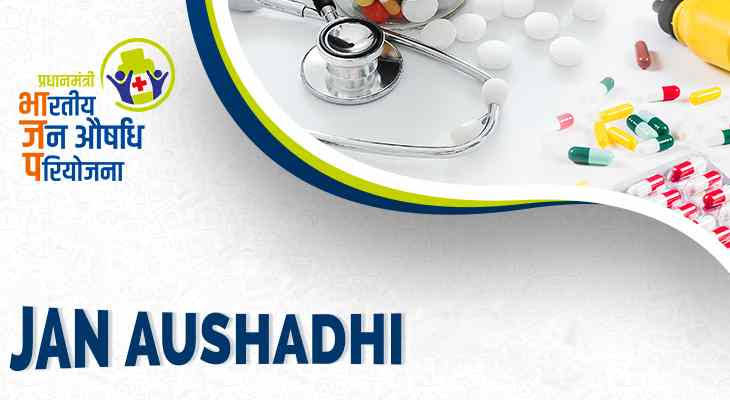
- 07 Feb 2024
Why is it in the News
PACS have been allowed by the Government to operate Pradhan Mantri Bhartiya Jan Aushadhi Kendras (PMBJK) under the Pradhan Mantri Bhartiya Jan Aushadhi Pariyojana of Department of Pharmaceuticals, Ministry of Chemicals and Fertilizers (GOI).
About Pradhan Mantri Bhartiya Jan Aushadhi Kendras:
- Pradhan Mantri Bhartiya Jan Aushadhi Kendras are established as part of the Pradhan Mantri Bhartiya Janaushadhi Pariyojana, initiated by the Department of Pharmaceuticals, Ministry of Chemicals and Fertilisers in November 2008.
Objective:
- The primary objective is to ensure the availability of quality medicines at affordable prices for all segments of society, particularly the economically disadvantaged, thereby reducing out-of-pocket healthcare expenses.
- These Kendras offer generic drugs that are equivalent in quality and efficacy to expensive branded drugs but are available at significantly lower prices.
- All essential therapeutic medicines are stocked in Jan Aushadhi Stores, along with allied medical products commonly found in chemist shops, enhancing the viability of operating a Jan Aushadhi store.
- The Pharmaceutical & Medical Devices Bureau of India (PMBI), established under the Department of Pharmaceuticals, Government of India, with the support of all Central Public Sector Undertakings (CPSUs), coordinates the procurement, supply, and marketing of generic drugs through the PMBKs.
Eligibility to Open a Jan Aushadhi Kendra:
- State Governments, reputable NGOs, trusts, private hospitals, charitable institutions, doctors, unemployed pharmacists, and individual entrepreneurs are eligible to apply for establishing a new Jan Aushadhi Kendra.
- Applicants are required to employ a Bachelor of Pharmacy (B Pharma) or Diploma in Pharmacy (D Pharma) degree holder as a pharmacist in their proposed store.
The Nagoya Protocol (Down To Earth)
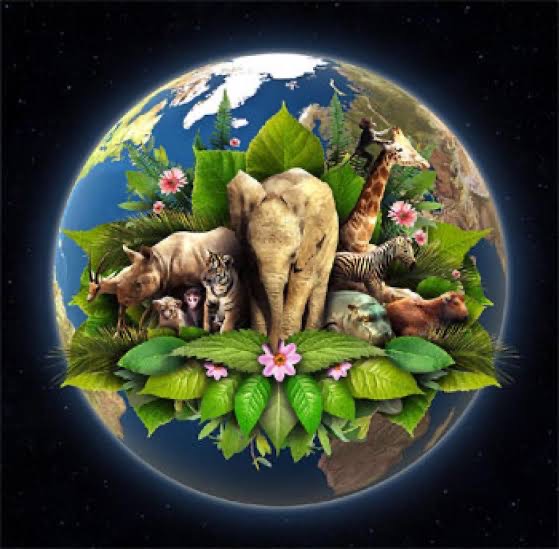
- 07 Feb 2024
Why is it in the News
Cameroon, a central African country recently adopted the Nagoya Protocol on Access and Benefit Sharing.
About the Nagoya Protocol:
- The Nagoya Protocol on Access to Genetic Resources and the Fair and Equitable Sharing of Benefits Arising from their Utilisation (the Protocol) is a globally binding agreement designed to fulfill the access and benefit-sharing obligations outlined in the Convention on Biological Diversity (CBD).
- Adopted in Nagoya, Japan, in October 2010, the Protocol came into effect on October 12, 2014, following the deposit of the fiftieth instrument of ratification.
- It establishes a transparent legal framework to ensure the fair and equitable distribution of benefits derived from the use of genetic resources, a key objective of the CBD.
Benefits of the Protocol:
- It provides researchers with a structured framework to access genetic resources for biotechnological research and development while ensuring a fair share of benefits derived from their utilization.
- Indigenous and local communities stand to benefit from the recognition and protection of traditional knowledge associated with genetic resources.
Scope of the Protocol:
- The Protocol covers genetic resources within the scope of the CBD and addresses the benefits arising from their utilization.
- Additionally, it encompasses traditional knowledge linked to genetic resources covered by the CBD and the benefits derived from its utilization.
Key Facts about the Convention on Biological Diversity (CBD):
- With 196 contracting parties, the CBD is the most comprehensive binding international agreement for conserving nature and sustainably managing natural resources.
- Opened for signing at the UN Conference on Environment and Development in Rio de Janeiro in 1992, the CBD aims to conserve biological diversity, ensure its sustainable use, and promote the fair and equitable sharing of benefits.
- The CBD covers biodiversity across ecosystems, species, and genetic resources.
- The Conference of the Parties (COP) serves as the highest decision-making body of the Convention, with the Secretariat based in Montreal, Canada.
- To further CBD objectives, two internationally binding agreements were adopted: the Cartagena Protocol in 2000, regulating the transboundary movement of living modified organisms, and the Nagoya Protocol in 2010, facilitating access to genetic resources and the equitable sharing of benefits.
Vidyanjali Scholarship Programme (India Today)
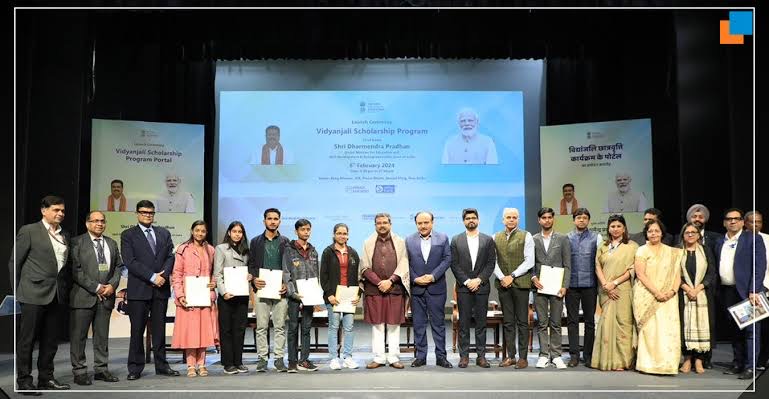
- 07 Feb 2024
Why is it in the News
Recently, the Union Minister of Education and Skill Development & Entrepreneurship launched the EdCIL Vidyanjali Scholarship Programme.
About the Vidyanjali Scholarship Programme:
- The Vidyanjali Scholarship Programme ensures equitable access to high-quality educational systems by facilitating a seamless transition from secondary to higher education and providing financial support to meritorious students from Navodaya Vidyalayas who lack financial means.
- It embodies a holistic approach to empowerment, aiming to expand educational opportunities, especially for students from economically disadvantaged backgrounds.
- The programme aims to secure assistance and funding from non-governmental partners and private sources, including CSR grants, national and international donors, and impact investors.
- Initially, the programme will benefit students in grades XI and XII studying in Navodaya Vidyalayas across the country.
- A dedicated fintech platform has been developed under Vidyanjali to disburse sponsorships to students through Direct Benefit Transfer (DBT).
- This platform plays a crucial role in data management, application processing, progress tracking, grant disbursement monitoring, fund utilization monitoring, generating impact reports for Sustainable Development Goals (SDGs), recognizing notable student achievements, and publicly acknowledging the support of funders, among other functions.
What is EdCIL?
- Educational Consultants India Limited (EdCIL) is the sole Public Sector Undertaking under the Ministry of Education, Government of India.
- Established on June 17, 1981, under the Companies Act, 1956, it holds the distinction of being categorized as a 'Mini Ratna Organisation' by the Government of India.
- EdCIL provides consultancy and technical services in various domains of education and human resource development, both domestically and globally.
- Its clientele includes numerous state and central government departments, public sector undertakings (PSUs), and autonomous bodies such as Indian Institutes of Technology (IITs), Indian Institutes of Management (IIMs), Indian Institutes of Information Technology (IIITs), Kendriya Vidyalayas, and Navodaya Vidyalayas.
India to sign 78 bn deal to extend Qatar LNG imports (Indian Express)
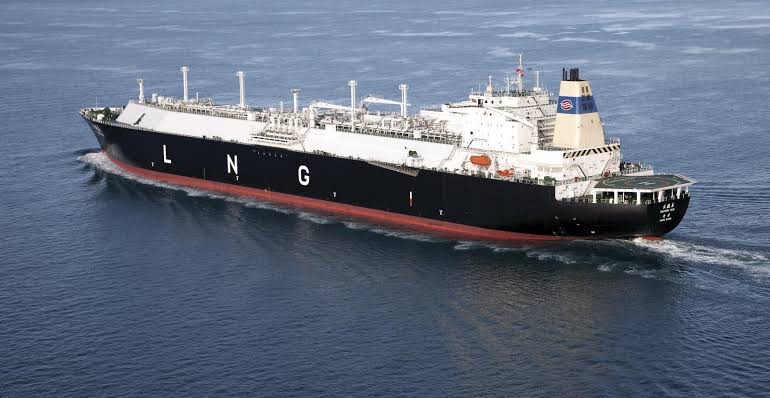
- 06 Feb 2024
Why is it in the News?
India and Qatar are likely to ink a deal recently to extend the supply of 7.5 million tonnes per annum (mtpa) of liquefied natural gas (LNG) for another 20 years beyond 2028.
Context:
- India wants to increase the share of natural gas in its primary energy mix to 15 per cent by 2030 from a little over 6 per cent at present.
- The country already depends on LNG imports to meet around half of its gas demand, and as demand grows, imports of the natural gas are also set to grow.
- World’s largest exporter of LNG, Qatar, accounts for over half of India’s imports.
- India imported a total of 19.85 million tonnes of LNG in 2022-23 (FY23), of which 10.74 million tonnes, or 54 per cent, came from Doha.
- India’s total imports from Qatar in FY23 were valued at $16.81 billion, of which LNG imports alone were worth $8.32 billion, or 49.5 per cent of the overall imports from Doha.
- Natural gas is seen as a significantly cleaner alternative to conventional petroleum fuels like diesel and petrol and is usually cheaper than crude oil.
- For India, which has an import dependency of over 85 per cent in the case of crude oil, natural gas is seen as more affordable as well as a transition fuel in the country’s energy transition pathway.
Trade Relationship Dynamics between India and Qatar:
- In the trade relationship between India and Qatar, there exists a significant trade imbalance favoring Qatar.
- Qatar stands as India's largest source of liquefied natural gas (LNG), which is gas cooled to liquid form for sea transportation.
Import Dependency on Gas:
- India's import reliance on natural gas stands at around 50%, with a governmental focus on increasing gas consumption likely leading to further import escalation in the future.
- Petronet LNG, India's primary LNG importer, holds a long-term contract with Qatar for importing 8.5 million tonnes per annum (mtpa) of LNG. Moreover, Qatar's gas holds a substantial share in India's LNG procurements from the spot market.
Demand for Natural Gas in India:
- India has set an ambitious target to elevate the share of natural gas in its primary energy mix to 15% by 2030, up from slightly over 6% at present.
- This aspiration is poised to drive a rapid surge in LNG imports in the upcoming years. Natural gas is perceived as a notably cleaner alternative to traditional petroleum fuels like diesel and petrol, and often comes at a lower cost than crude oil.
- Given India's over 85% import dependency on crude oil, gas emerges as both more economically viable and a smoother transition fuel in the energy transformation trajectory.
Trade Dynamics: India's Import from Qatar and Export to Qatar
- In FY 2022-23, India's total imports from Qatar amounted to $16.81 billion, with LNG imports constituting $8.32 billion of the total.
- While Indian LNG importers are endeavoring to diversify their sources, reducing heavy reliance on Qatar may take considerable time.
- On the export front, India's exports to Qatar were valued at only $1.97 billion in FY 2022-23, encompassing cereals, copper articles, iron and steel articles, vegetables, fruits, spices, and processed food products.
Global LNG Market Trends:
- The global LNG market currently leans towards sellers, especially following Russia's invasion of Ukraine, which disrupted Russian natural gas supplies to Europe.
- This disruption triggered a surge in LNG spot cargo prices globally.
- Unlike term contracts, spot LNG market prices are subject to higher volatility, with prices rising steeply in times of tight supply and falling sharply during a supply glut.
Future Outlook of the LNG Market:
- Industry experts predict a shift in the global LNG market dynamics over the next few years, transitioning into a buyer's market due to the surge in new LNG export projects.
- A buyer's market arises when there is an excess supply of goods or services compared to demand, granting buyers more negotiating leverage.
- Despite this anticipated shift, it may take several years for this scenario to materialize, with a substantial portion of new LNG export capacity expected to originate from Qatar itself.
International Centre for Integrated Mountain Development (DownToEarth)
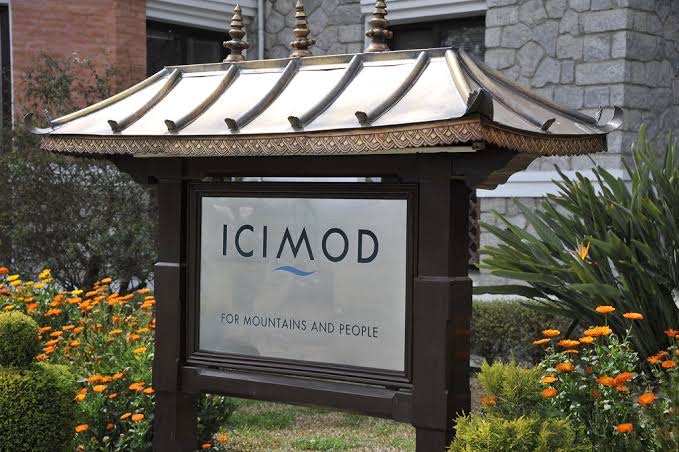
- 06 Feb 2024
Why is it in the News?
Experts from The International Centre for Integrated Mountain Development (ICIMOD) called for ‘bold action’ and ‘urgent finance’ to prevent collapse of nature in High Mountain Asia on February 5, 2024, in the Nepalese capital of Kathmandu.
About the International Centre for Integrated Mountain Development (ICIMOD):
- The International Centre for Integrated Mountain Development (ICIMOD) is an intergovernmental knowledge and learning center dedicated to serving the communities of the Hindu Kush Himalaya (HKH) region.
- Established and inaugurated on December 5, 1983, its mission is to generate and share knowledge that informs regional policy and action, attracting investments to facilitate the transition to greener, more inclusive, and climate-resilient development.
Membership and Governance:
- ICIMOD's member countries include Afghanistan, Bangladesh, Bhutan, China, India, Myanmar, Nepal, and Pakistan.
- Its highest governing body is the Board of Governors, composed of representatives from each member country and independent members nominated by the ICIMOD Support Group based on their professional expertise and experience.
Functions and Objectives:
- The center serves the HKH region by generating and sharing information and knowledge to address critical mountain-related challenges.
- It bridges scientific research with policy formulation and practical on-the-ground implementation.
- Furthermore, ICIMOD provides a regional platform for experts, planners, policymakers, and practitioners to exchange ideas and perspectives, facilitating sustainable mountain development.
- Headquarters of ICIMOD is in Kathmandu, Nepal.
Key Facts about the Hindu Kush Himalaya (HKH) Region:
- The Hindu Kush Himalaya (HKH) region spans 3,500 km across eight countries, from Afghanistan in the west to Myanmar in the east.
- It serves as the source of ten major Asian river systems, including the Amu Darya, Indus, Ganga, Brahmaputra, and others.
- The HKH region plays a vital role in providing water, ecosystem services, and livelihoods to the people living within its boundaries.
Israel discovers 6-million-year-old giant underwater canyon of Messinian Event (TOI)
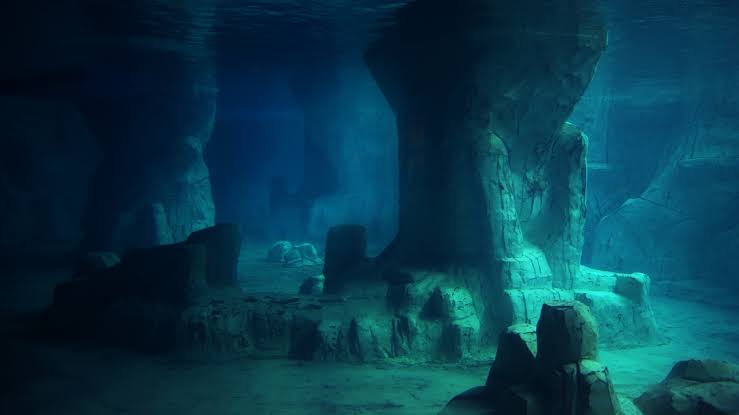
- 06 Feb 2024
Why is it in the News?
The Israel Geological Survey announced recently that Israeli geologists discovered a huge underwater canyon on the bottom of the Eastern Mediterranean that was formed about 6 million years ago.
What is Messinian Event?
- The Messinian Event, also referred to as the Messinian Salinity Crisis (MSC).
- It marks a significant geological occurrence during which the Mediterranean Sea experienced a cycle of partial or near-complete desiccation, making it one of the most severe ecological crises in Earth's history.
- This event unfolded approximately 6 million years ago (MYA) and persisted until around 5.3 MYA.
- The process began with the severance of the connection between the Atlantic Ocean and the Mediterranean Sea.
- This disconnection resulted from a combination of reduced sea levels globally and the collision of the European and African plates, causing the land to rise.
- Consequently, the Mediterranean experienced significant evaporation, as its evaporation rate exceeded its precipitation rate.
- Without a substantial influx of water from the Atlantic, the sea began to evaporate rapidly.
- During this period, a vast underground canyon formed, with rivers cutting deep into the basin floor, creating a canyon much larger than the Grand Canyon, reaching depths of up to 2,000 meters (6562 feet).
- As the Mediterranean water evaporated, salt deposits, primarily composed of Halite and Gypsum, accumulated on the basin floor, some reaching depths of 800 meters (2,500 feet).
- Despite the rapid evaporation, salt deposition did not keep pace, resulting in an increase in water salinity.
- The heightened salinity levels made the Mediterranean inhospitable to marine life, leading to a decline in biodiversity.
- Eventually, the sea dried up almost entirely, culminating in the Zanclean flood when the Atlantic Ocean reclaimed the basin.
What is Deep-sea Canyon?
- Deep-sea canyons, such as those formed during the Messinian Event, are steep valleys carved into the seafloor of the continental slope, extending onto the continental shelf.
- These canyons vary in size and shape and have been sculpted by various erosional processes, including river flows during periods of low sea levels, mudslides, debris flows, and turbidity currents.
Water (Prevention and Control of Pollution) Amendment Bill, 2024 (Indian Express)
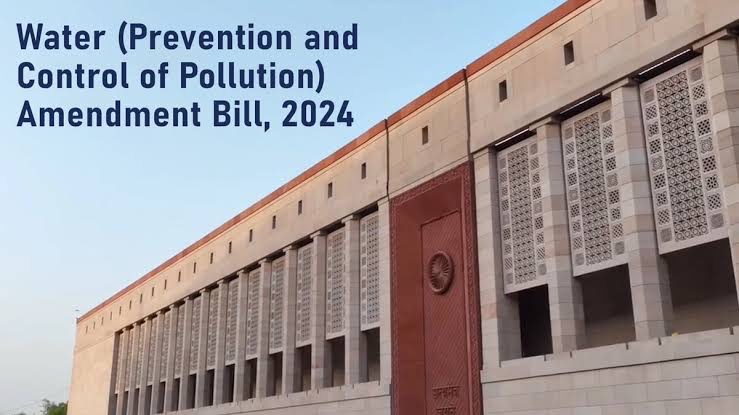
- 06 Feb 2024
Why is it in the News?
The Centre on Monday introduced a Bill that would enable it to prescribe the norms for nominating chairpersons of State Pollution Control Boards, exempt certain industrial units from restrictions, and decriminalize “minor offenses” related to water pollution.
News Summary:
- The Water (Prevention and Control of Pollution) Amendment Bill, 2024 has been introduced in the Rajya Sabha.
- It is applicable to Himachal Pradesh and Rajasthan, with the potential to extend to other states through resolutions under the Water (Prevention and Control of Pollution) Act, 1974.
- The Bill empowers the Centre to exempt certain industrial plants from restrictions and issue guidelines related to industry establishment.
About Water (Prevention and Control of Pollution) Amendment Bill, 2024:
- Enacted in 1974, the Water (Prevention and Control of Pollution) Act aimed to prevent and control water pollution, establishing penal provisions for non-compliance.
Rationale for the Amendment:
- The Amendment Bill underscores the importance of democratic governance, emphasizing trust in people and institutions. It addresses the outdated regulations leading to a trust deficit.
Key Amendments Proposed:
- The Amendment Bill seeks to modernize the existing penal provisions, replacing imprisonment with fines for minor violations. This move aligns with the principles of Ease of Living and Ease of Doing Business.
Major Features of the Amendment Bill:
- The Bill proposes several key changes, including:
- Prescribing the process for nominating the chairman of the State Pollution Control Board by the Central Government.
- Granting the Central government authority to exempt certain industrial plants from restrictions on new outlets and discharges.
- Issuing guidelines on matters related to the establishment of industries by the Central government.
- Decriminalizing minor offenses and substituting them with monetary penalties.
- Specifying the adjudication process for penalties by officers of appropriate rank.
- Outlining penalties for non-compliance with regulations regarding new outlets, discharges, and sewage.
- Allocation of penalty amounts to the Environmental Protection Fund established under the Environment (Protection) Act, 1986.
Mera Gaon, Meri Dharohar (MGMD)(PIB)

- 06 Feb 2024
Why is it in the News?
The Government of India has decided to map and document all villages under Mera Gaon, Meri Dharohar (MGMD) Programme.
About the Mera Gaon Meri Dharohar Programme:
- The Mera Gaon Meri Dharohar (MGMD) programme is a nationwide initiative led by the Ministry of Culture, launched on July 27, 2023, under the National Mission on Cultural Mapping.
- Its primary aim is to compile detailed information about the life, history, and cultural essence of Indian villages and make this data accessible to both virtual and real-time visitors.
Key Components and Categories:
- Under the MGMD, information is collected across seven broad categories, including:
- Arts and Crafts Village
- Ecologically Oriented Village
- Scholastic Village Linked with Textual and Scriptural Traditions of India
- Epic Village linked with Ramayana, Mahabharata, and/or Puranic legends and oral epics
- Historical Village linked with Local and National History
- Architectural Heritage Village
- Any other distinctive characteristic, such as fishing village, horticulture village, shepherding village, etc.
Objectives:
- The primary objective of the project is to culturally map India's 6.5 lakh villages across 29 States and 7 Union Territories on a comprehensive virtual platform.
- Through MGMD, individuals will have the opportunity to immerse themselves in India's diverse and vibrant cultural heritage.
Core Ideals and Benefits:
- The fundamental aim of the project is to foster appreciation for India's rich cultural traditions, thereby promoting economic growth, social harmony, and artistic development in rural communities. The programme is envisioned as a catalyst for showcasing and preserving India's cultural diversity.
Financial Outlay and Scheme Components:
- A financial outlay of Rs. 353.46 Crore has been approved under the scheme of Financial Assistance for Promotion of Art and Culture, comprising eight scheme components:
- Financial Assistance to Cultural organizations with National Presence
- Cultural Function & Production Grant (CFPG)
- Financial Assistance for the Preservation & Development of Cultural Heritage of the Himalayas
- Financial Assistance for the Preservation & Development of Buddhist/Tibetan Organization
- Financial Assistance for Building Grants including Studio Theatres
- Financial Assistance For Allied Cultural Activities
- Scheme for Safeguarding the Intangible Cultural Heritage
- Through these components, the programme aims to provide comprehensive support for the preservation and promotion of India's rich cultural heritage.
National Agriculture Market or eNAM (Financial Express)
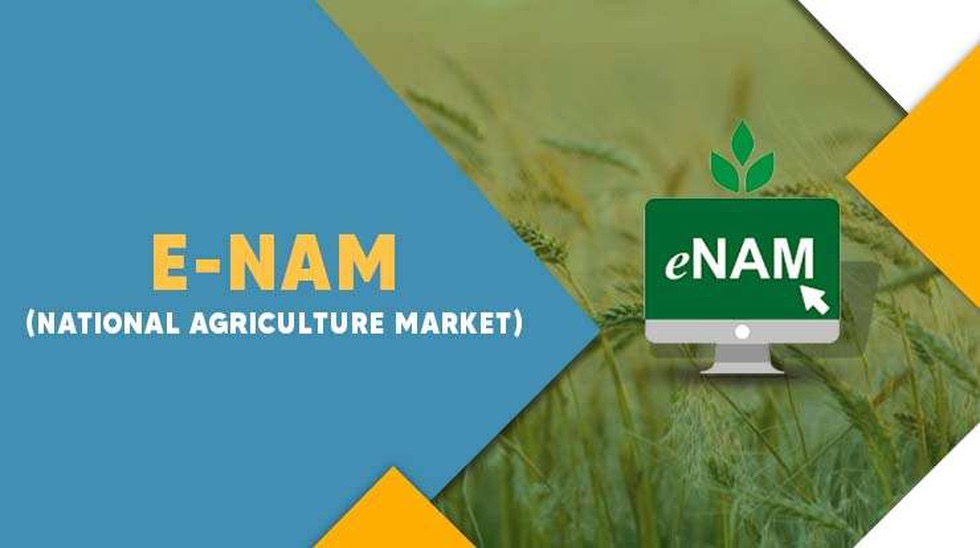
- 05 Feb 2024
Why is it in the News
With more states opening up or facilitating trade of agricultural commodities on the electronic -National Agriculture Market (eNAM), a spurt in trading among various markets within the state as well as at the inter-state level is being witnessed.
What is the National Agriculture Market (eNAM)?
- eNAM is an online trading platform dedicated to agricultural commodities in India.
- Launched on April 14, 2016, it is wholly funded by the Government of India.
- The Small Farmers Agribusiness Consortium (SFAC), operating under the Ministry of Agriculture and Farmers Welfare, takes the lead in implementing e-NAM
Objectives of eNAM:
- The primary goal is to enhance marketing opportunities for farmers by establishing a competitive and transparent price discovery system.
- It also facilitates online payment options for buyers, aiming to streamline the selling process for farmers.
Network and Structure:
- The NAM portal connects existing agricultural markets, including APMC/RMC market yards, sub-market yards, private markets, and unregulated markets.
- By creating a centralized online platform, e-NAM unifies agricultural markets nationwide for efficient commodity price discovery.
Key Features:
-
- Farmers can showcase products in nearby markets, allowing traders from any location to provide quotes.
- Single-window services encompass all APMC-related activities, including commodity details, buy-and-sell offers, and direct e-payment settlements to farmers' accounts.
- Facilitating Trade:
- eNAM allows traders, buyers, and commission agents to obtain licenses from state-level authorities without physical presence requirements.
- Quality standards and infrastructure for testing are harmonized in every market, including provision for Soil Testing Laboratories in selected mandis.
- Stakeholder Benefits:
- Designed for the collective benefit of farmers, mandis, traders, buyers, Farmer Producer Organizations (FPOs), and exporters.
- Stakeholder advantages include transparent online trading, real-time price discovery, reduced transaction costs, and availability of commodity prices on the e-NAM mobile app.
- Additional Benefits:
- Farmers receive details of commodity prices, quantity sold, and quality certification through SMS.
- The system promotes a more efficient supply chain and facilitates warehouse-based sales.
- Online payments are directly deposited into farmers' bank accounts, ensuring a seamless and secure financial transaction process.
INS Sandhayak - the Indian Navy’s First Survey Vessel Large (SVL) Ship (TOI)
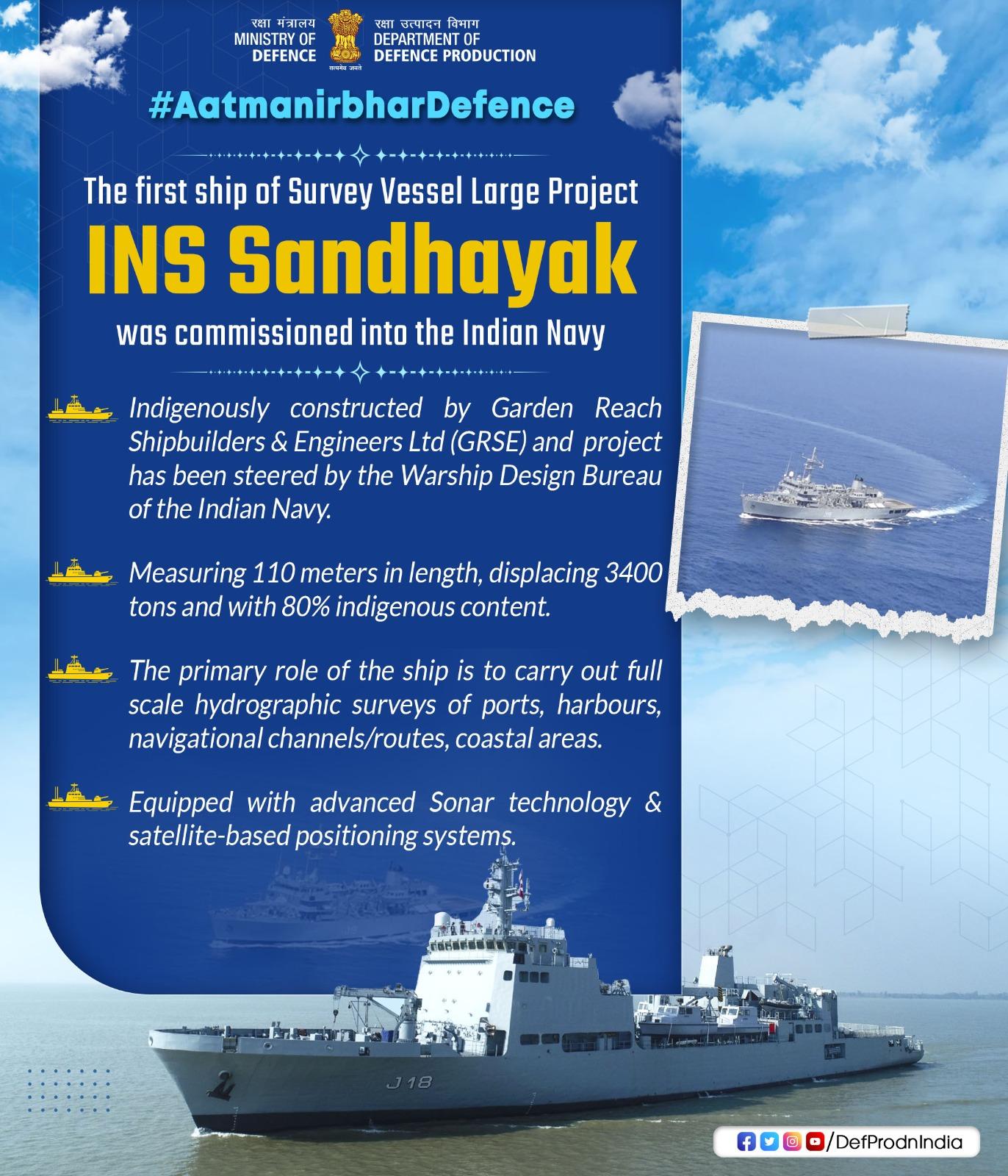
- 05 Feb 2024
Why is it in the News
Defense minister Rajnath Singh commissioned survey vessel INS Sandhayak into the Indian Navy at the Naval Dockyard recently.
About INS Sandhayak:
- INS Sandhayak stands as the first unit in a series of four Survey Vessel (Large) ships under construction at Garden Reach Shipbuilders & Engineers (GRSE), Kolkata.
- Its primary mission is to conduct thorough coastal and deep-water Hydrographic Surveys, focusing on Port and Harbour approaches, navigational channels, and routes.
- The operational scope extends to maritime limits, encompassing the Exclusive Economic Zone (EEZ) and extended continental shelf.
Features:
-
- The vessel is equipped to gather oceanographic and geophysical data, serving the needs of both defense and civil applications.
- In a secondary role, it provides limited defense capabilities and can function as a hospital ship during wartime or emergencies.
- Cutting-Edge Technology:
-
- Equipped with advanced hydrographic tools, including a Data Acquisition and Processing System, Autonomous Underwater Vehicle, Remotely Operated Vehicle, DGPS Long-range positioning systems, and Digital side-scan sonar.
- Performance Specifications:
-
- Powered by two diesel engines, INS Sandhayak boasts a speed capability exceeding 18 knots.
- With a length of 110 meters and a displacement of 3400 tons, the vessel maintains an indigenous content exceeding 80 per cent by cost.
- Historical Continuity:
-
- This ship has been re-incarnated in its current form from the previous Sandhayak, decommissioned in 2021.
Uniform Civil Code (Indian Express)

- 05 Feb 2024
Why is it in the News
The Uttarakhand Cabinet on Sunday approved the final draft of the Uniform Civil Code (UCC) without any changes, a day before the state Assembly convenes for a special session to take up the Bill.
What is Uniform Civil Code (UCC)?
- A Uniform Civil Code signifies a unified legal framework for the entire country, applicable across all religious communities concerning personal matters like marriage, divorce, inheritance, and adoption.
- The objective is to replace the current fragmented personal laws that govern interpersonal relationships within different religious communities.
Constitutional Framework:
- Article 44 of the Constitution mandates the State to strive for a Uniform Civil Code applicable to all citizens.
- Positioned in Part-IV as a Directive Principle, Article 44, while not justiciable, serves as a fundamental governance guideline.
- These principles, outlined in Article 37, provide overarching ideas for the State to consider in policy formulation and law enactment.
Current Landscape of Personal Laws:
- In the Concurrent list of the Constitution, matters such as marriage, divorce, and inheritance fall under both Parliament and state legislature jurisdictions.
- Hindu personal laws have been codified into four parts since 1956, while Muslim laws, not codified per se, draw from religious texts.
- Christians, Zoroastrians, and Jews are governed by their own personal laws. Goa stands as an exception, following the Portuguese Civil Code.
Need for Uniform Civil Code:
- A UCC aims to establish equal status for all citizens, addressing the inconsistency and lack of uniformity in personal laws across different religions.
- This inconsistency, conflicting with Article 14's Equality before the Law guarantee, often results in gender disparities.
Challenges and Criticisms:
- While advocating equality, the UCC concept raises concerns about potential clashes with the Right to Freedom of Religion (Article 25).
- Critics argue that separate personal laws uphold the right to practice one's religion, particularly crucial for minorities.
- Striking a balance, the Law Commission's 2018 report suggests preserving diversity in personal laws while ensuring alignment with fundamental rights.
The Way Forward:
- Encouraging a progressive mindset through education, awareness, and sensitization is vital for understanding the spirit of the UCC.
- Simultaneously, discriminatory personal laws should be amended or abolished.
- The Law Commission recommends codifying different personal laws to derive universal principles prioritizing equity, rather than imposing a blanket Uniform Civil Code
“Pineapple Express” Sweeps California, Atmospheric River Leaves State In Distress (India Today)
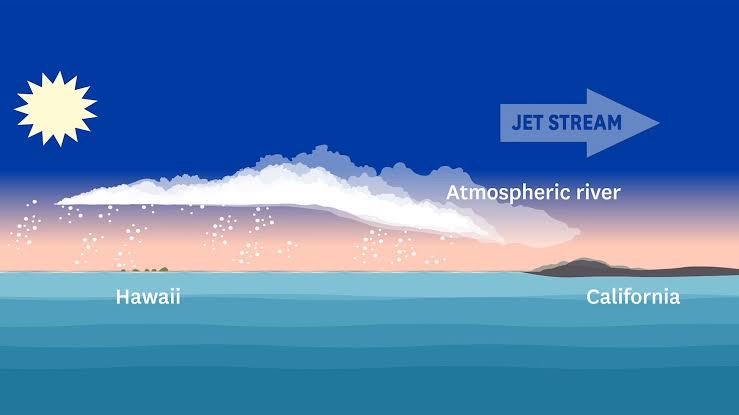
- 05 Feb 2024
Why is it in the News?
A strong and grievous atmospheric river storm is predicted to hit California during the later part of Saturday, leaving over another storm, which resulted in extreme flooding in the last week.
What is an Atmospheric River?
- Atmospheric rivers are long and relatively narrow bands of water vapor that form over an ocean and flow through the sky, transporting much of the moisture from the tropics to northern latitudes.
- They occur globally but are especially significant on the West Coast of the United States, where they create 30% to 50% of annual precipitation and are vital to water supplies but also can cause storms that produce flooding and mudslides.
- While they are an incredibly important source of rainfall, they can also bring flash flooding, mudslides, and landslides, sometimes killing people and destroying property.
- Formation: Formed by winds associated with cyclones, atmospheric rivers typically range from 250 miles to 375 miles (400 to 600 kilometers) in width and move under the influence of other weather.
- Many atmospheric river events are weak. But the powerful ones can transport extraordinary amounts of moisture.
- Studies have shown that they can carry seven to 15 times the average amount of water discharged daily by the Mississippi River.
- Forty-six atmospheric rivers made landfall in the U.S. West Coast during the water year 2023.
- Nine were categorized as strong, two were extreme and one was exceptional.
- California experienced extensive flooding and massive snowfall.
What Happens When an Atmospheric River Reaches Land?
- When the moisture-laden air moves over mountain ranges such as the Sierra Nevada along the California-Nevada line, the water vapor rises and cools, becoming heavy precipitation that falls as rain or snow.
- While traditional cold winter storms out of the north Pacific build the Sierra snowpack, atmospheric rivers tend to be warm.
- Snow may still fall at the highest elevations but rain usually falls on the snowpack at lower elevations.
- That can quickly prompt melting, runoff and flooding and decrease the snowpack needed for California’s water supply.
What is a Pineapple Express?
- It is a nickname for a strong atmospheric river in the tropical Pacific near Hawaii.
Where did the Term Atmospheric River Come From?
- The name came from research published in the 1990s by scientists Yong Zhu and Reginald E. Newell of the Massachusetts Institute of Technology.
Multidimensional Poverty in India (Indian Express)
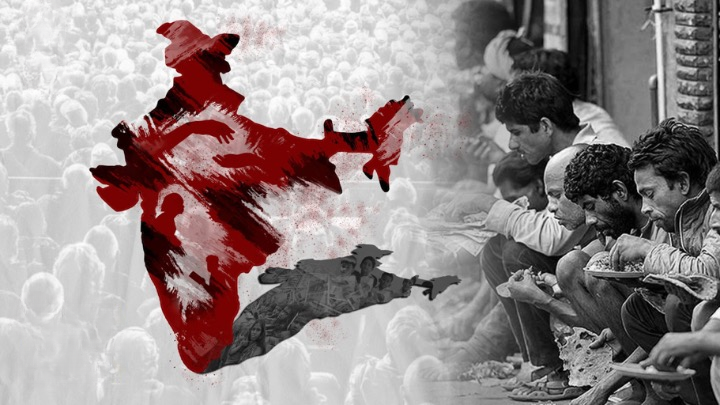
- 03 Feb 2024
Why is it in the News?
Recently, In her Interim Budget speech, the Union Finance Minister informed that nearly 25 crore people have been raised from multi-dimensional poverty in the last 10 years.
What is Multidimensional Poverty?
- Multidimensional Poverty refers to the complex nature of poverty, where individuals or communities experience various simultaneous disadvantages.
- These may include inadequate health, malnutrition, limited access to clean water and electricity, substandard living conditions, and limited educational or employment opportunities.
- Merely focusing on income as a poverty indicator fails to fully grasp the depth and breadth of deprivation experienced by individuals.
- Multidimensional Poverty recognizes that poverty encompasses more than just economic factors; it encompasses a range of dimensions that impact well-being and quality of life.
- This approach to measuring poverty incorporates not only income or consumption levels but also considers deprivations in education and access to essential infrastructure.
- The international poverty line, set at $2.15 per day (in 2017 purchasing power parity terms) by the World Bank, serves as a benchmark for evaluating monetary value but is complemented by a broader assessment of various dimensions of deprivation.
What is the Global Multidimensional Poverty Index?
- The Global Multidimensional Poverty Index (MPI) serves as a vital tool for assessing acute multidimensional poverty in over 100 developing nations.
- Published collaboratively by the Oxford Poverty and Human Development Initiative (OPHI) and the UNDP's Human Development Report Office, it provides a comprehensive framework for tracking deprivation across three key dimensions and ten indicators.
- This index operates on a scale from 0 to 1, with higher values indicating greater levels of poverty.
- According to MPI methodology, individuals experiencing deprivation in a third or more of the weighted indicators are classified as "MPI poor."
India's Progress and Comparison:
- According to the 2023 Global MPI report, India successfully uplifted 415 million people out of poverty between 2005-06 and 2019-21, marking a significant achievement in poverty alleviation efforts.
- India is among 25 nations that have effectively halved their global MPI values within 15 years.
Comparison with India's National MPI:
- In addition to the global MPI, India has its own National Multidimensional Poverty Index.
- Published by NITI Aayog, India's MPI incorporates two additional indicators:
- Maternal health (under the health dimension) and
- Bank account ownership (under the standard of living dimension).
- This modification aligns the MPI with India's specific national priorities, offering a nuanced understanding of poverty dynamics within the country.
GHAR (GO Home and Re-Unite) Portal for Restoration and Repatriation of Child (PIB)
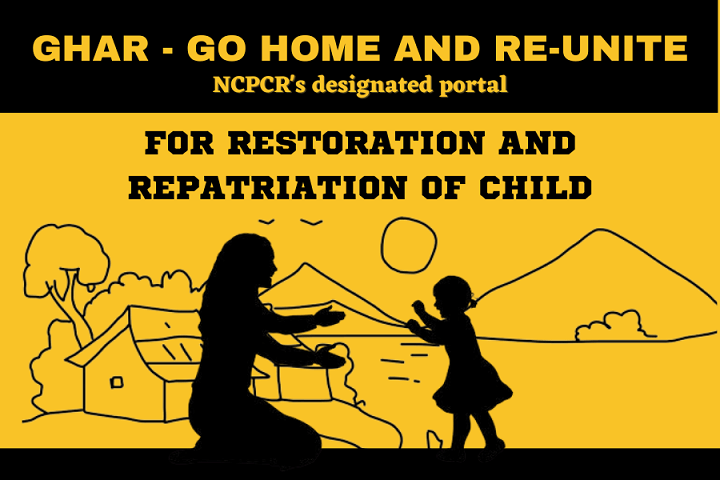
- 03 Feb 2024
Why is it in the News?
The Ministry of Women and Child Development developed the “Track Child Portal”, which enables tracking of the missing and found children in all States/UTs including Maharashtra, Chhattisgarh, North Eastern States and Jharkhand.
What is the GHAR Portal?
- National Commission for Protection of Child Rights (NCPCR) has developed and launched the portal GHAR - Go Home and Reunite, with the sole purpose of restoration and repatriation of children.
- The GHAR portal has been developed to digitally monitor and track the restoration and repatriation of children.
- Here's how the portal can help strayed children go home and reunite with their families:
- The portal digitally tracks and monitors children who are in the juvenile justice system and have to be repatriated to another country, state or district.
- It allows the digital transfer of cases of children to the Juvenile Justice Board/Child Welfare Committee of the state concerned.
- It will help in speedy repatriation of children.
- Where there is a requirement for a translator/interpreter/expert, a request will be sent to the state government concerned.
- Child welfare committees and district child protection officers can ensure proper restoration and rehabilitation of children by digitally monitoring the progress of the case of the child.
- A checklist format will be provided in the forms so that the children who are being hard to repatriate or children who are not getting their entitled compensation or other monetary benefits can be identified.
- A list of government-implemented schemes will be provided so that at the time of restoration the Child Welfare Committees can link the child with the schemes to strengthen the family and ensure that the child remains with his/her family.
- The Ministry of Women and Child Development is administering the Juvenile Justice (Care and Protection of Children) Act, 2015 (JJ Act, 2015) (as amended in 2021) and the Rules thereunder, to ensure the safety, security, dignity and well-being of children.
- The Act provides for the protection of children in need of care and protection and those in conflict with the law by catering to their basic needs through care, protection, development, treatment and social reintegration.
- Under the JJ Act, 2015, the Child Welfare Committees have been empowered to make decisions regarding the children in need of care and protection for the children’s best interest.
- They are also mandated to monitor the functioning of the Child Care Institutions (CCIs).
- Similarly, under section 106 of the JJ Act, 2015, every state government has to constitute a District Child Protection Unit (DCPU) for every district to take up matters relating to children to ensure the implementation of the JJ Act, 2015 and its rules thereunder.
- To ensure effective coordination in child safety, protection and development, District Magistrates have been made the heads of DCPUs.
- DMs have been empowered to review the functioning of DCPUs and CWCs at regular intervals to ensure prompt decisions as per provisions of the JJ Act and Rules are taken by these bodies, keeping in mind the best interests of the children.
: Law Commission of India (Indian Express)
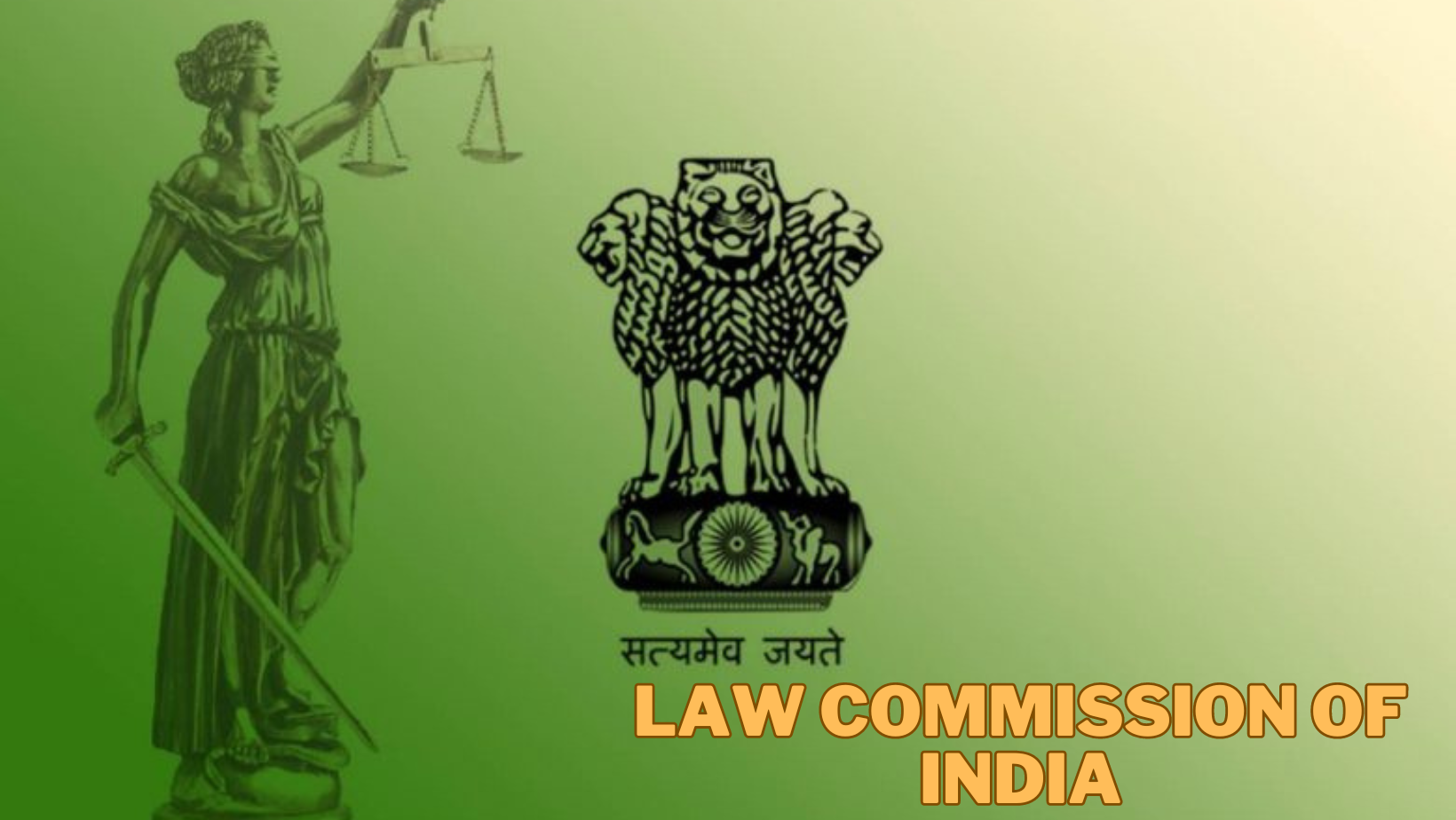
- 03 Feb 2024
Why is it in the News?
The 22nd Law Commission of India led by Justice Ritu Raj Awasthi has recommended that the offense of criminal defamation should be retained in the new criminal laws.
About the Law Commission of India:
- The Law Commission of India is a non-statutory body, constituted by the Government of India from time to time.
- The commission's function is to research and advise the government on legal reform, and is composed of legal experts, and headed by a retired judge.
- The commission is established for a fixed tenure and works as an advisory body to the Ministry of Law and Justice.
- The first Law Commission was established during colonial rule in India by the East India Company under the Charter Act of 1833 and was presided over by Lord Macaulay.
- After that, three more commissions were established in British India.
- The first Law Commission of independent India was established in 1955 for a three-year term.
- Since then, twenty-one more commissions have been established.
- The 22nd Law Commission has been notified with effect from 21st February 2020 for a term of 3 years.
- Cabinet approves the extension of the term of the 22nd Law Commission of India up to 31st August 2024.
- Justice Rituraj Awasthi (Former Chief Justice of the Karnataka HC) was appointed as the chairperson of the current 22nd Law Commission.
- The last chairman of the 21st Law Commission was retired Supreme Court judge Justice B.S. Chauhan.
The Responsibilities of the Law Commission:
- Identification of laws which are no longer relevant and recommending the repeal of obsolete and unnecessary enactments;
- Suggesting enactment of new legislations as may be necessary to implement the Directive Principles and to attain the objectives set out in the Preamble of the Constitution;
- Considering and conveying to the Government its views on any subject relating to law and judicial administration that may be specifically referred to it by the Government through the Ministry of Law & Justice (Department of Legal Affairs);
- Considering the requests for providing research to any foreign countries as may be referred to it by the Government through the Ministry of Law & Justice (Department of Legal Affairs);
- Preparing and submitting to the Central Government, from time to time, reports on all issues, matters, studies and research undertaken by it and recommending such reports for effective measures to be taken by the Union or any State; and
- Performing such other functions as may be assigned to it by the Central Government from time to time.
Govt To Sell Bharat Rice At Rs 29/Kg in Retail Market (Indian Express)
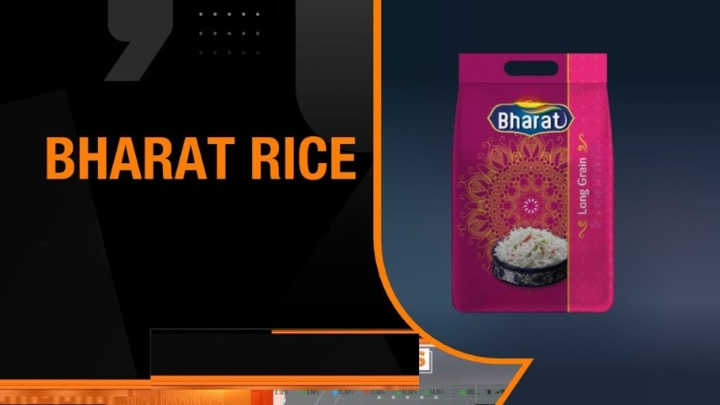
- 03 Feb 2024
Why is it in the News?
The government will launch retail sales of Bharat Rice at ?29 per kg from next week to provide relief to consumers. It has also directed traders to disclose rice stock to control prices.
Context:
- The recent announcement by the Union government regarding the retail sale of rice at Rs 29 per kg through three cooperatives has garnered attention in the news.
- This initiative, known as 'Bharat Rice,' seeks to address the upward trend in rice prices.
- Over the past year, retail prices have surged by 14.5%, while wholesale prices have seen a 15.5% increase.
- This move aims to mitigate the impact of rising rice prices on consumers and ensure the affordability and accessibility of this staple food item.
Recent Developments:
- In response to escalating domestic rice prices and to ensure food security within the country, the Union government implemented measures in 2023.
- These included a ban on the export of white (non-basmati) rice and the imposition of a 20% export duty on par-boiled rice.
- The decision to restrict rice exports was driven by the need to stabilize domestic prices and guarantee an ample food supply for the nation.
- Experts predict that these restrictions are likely to remain in place until the upcoming general election scheduled for April-May 2024.
- Challenges in rice production during the 2023-24 kharif season, exacerbated by dry weather conditions attributed to El Nino, have further complicated the supply situation.
- Despite these trade limitations, local rice prices have remained firm, prompting government warnings to retailers.
Government Intervention:
- Union Food Secretary Sanjeev Chopra highlighted a 14.51% increase in retail rice prices over the past year.
- In response to rising rice prices, the government has mandated traders, wholesalers, retailers, and processors to report their rice and paddy stocks every Friday to manage food inflation and curb speculative activities.
- To counter inflationary pressures, the government has initiated the retail sale of 'Bharat Rice' to the general populace.
- Initially, 5 lakh tonnes of rice will be allocated for retail sale under this brand through agencies like NAFED, NCCF, and Kendriya Bhandar, priced at ?29 per kilogram in 5 kg and 10 kg bags.
- Furthermore, the Food Corporation of India (FCI) has ample stocks of good-quality rice available for sale to traders and wholesalers under the open market sales scheme at a reserve price of ?29 per kilogram.
Status of India’s Rice Exports:
- India holds the position of the world's largest rice exporter, accounting for 45% of the global rice market share.
- During April-May 2023, overall rice exports witnessed a notable increase of 21.1% compared to the previous fiscal year.
- Basmati rice exports in May 2023 alone surged by 10.86% compared to May 2022, reflecting a sustained upward trend.
- The export of non-Basmati rice has been steadily rising over the past three years, with Basmati rice exports in 2022-2023 surpassing the previous year's figures.
- Recent data provided by the government indicates a 15% increase in total rice exports (excluding broken rice) by August 17 compared to the corresponding period in the previous year.
- Regional Dynamics: Thailand anticipates a nearly 25% decrease in rice production for the 2023-2024 season, while Myanmar has halted raw rice exports.
- Similarly, rice availability is expected to be limited in Iraq and Iran.
- India annually exports more than 4 million tons of basmati - a premium long-grain variety famed for its aroma - to Iran, Iraq, Yemen, Saudi Arabia, the United Arab Emirates and the United States, among others.
Three New Major Railway Corridors Announced Under PM GatiShakti in the Interim Budget 2024-25 (PIB)
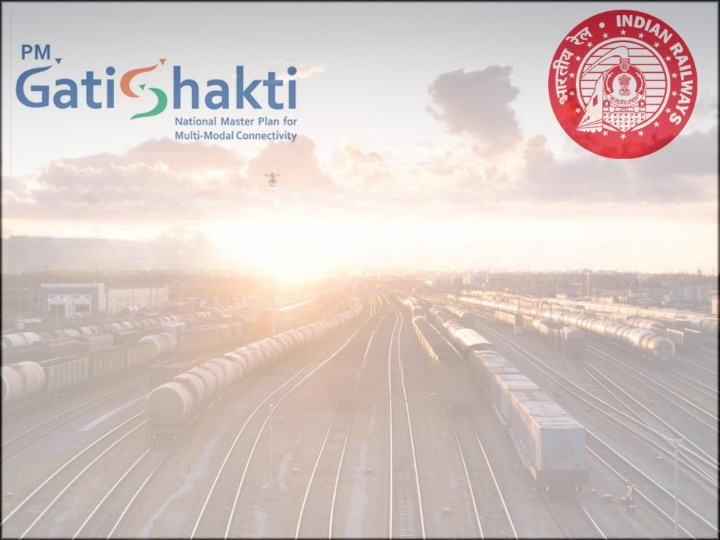
- 03 Feb 2024
Why is it in the News?
The Interim Budget for 2024-25 announcement for implementation of three Economic Railway Corridors identified under the PM GatiShakti for enabling multi-modal connectivity.
Context:
- The Interim Budget for 2024-25 has laid the groundwork for implementing three major Economic Railway Corridors under the PM GatiShakti initiative.
- This will enable multi-modal connectivity, including:
- Energy, mineral, and cement corridors
- Port connectivity corridors and
- High-traffic density corridors
Significance of the Three Corridors:
- Logistics Efficiency Boost: These Corridors serve as catalysts for enhancing logistics efficiency, thereby cutting down on the costs associated with rail transportation.
- By streamlining rail movements, they pave the way for smoother and more cost-effective logistics operations.
- Alleviating Rail Congestion: One of their primary roles is to alleviate congestion on heavily trafficked rail routes.
- By diverting some of the traffic to these designated Corridors, the strain on high-density rail networks is relieved, ensuring smoother and more reliable transportation across the board.
- Promoting Modal Shift: The Corridors play a pivotal role in encouraging a modal shift from road to rail and coastal shipping.
- By providing efficient rail connections and integrating coastal shipping options, they offer viable alternatives to traditional road transport, thereby reducing congestion on highways and minimizing environmental impact.
- Environmental Sustainability: A key benefit of these Corridors is the reduction of the carbon footprint associated with logistics operations.
- By promoting more environmentally friendly modes of transportation such as rail and coastal shipping, they contribute to mitigating the environmental impact of freight movement, fostering sustainability in logistics practices.
About PM GatiShakti National Master Plan:
- The government of India initiated the Pradhan Mantri Gati Shakti National Master Plan to transform the nation's infrastructure.
- PM Modi launched the PM Gati Shakti National Master Plan (NMP) on 13th October 2021, on the 75th Independence Day to provide multimodal connectivity infrastructure to various economic zones.
- The scheme is expected to smooth out the execution of projects across the nation and foster coordination between different ministries engaged with these projects.
Advantages of PM Gati Shakti:
- It lays out a centralised portal to unite the infrastructural initiatives of 16 central ministries and departments.
- Facilitates these ministries, gives a centralised transportation and logistics grid for smoother data flow and sped up project clearance.
- Large-scale infrastructure projects like UDAAN, expansion of the railway network, Bharatmala, Sagarmala, inland waterways, and Bharat Net will be executed by the Gati Shakti master plan.
- The Gati Shakti master plan aims to create employment potential for a large number of individuals.
- The plan's three primary targets are smooth multimodal connectivity, enhanced prioritisation and optimal usage of resources to create capacities on time, and resolution of issues like standardisation, disjointed planning and clearances.
- The Gati Shakti mission aims to create world-class infrastructure in the country and foster logistical synergy across various modes of movement.
- The general objective of the drive is to increase competitiveness and economic development in India.
Expansion of Nano DAP (Indian Express)
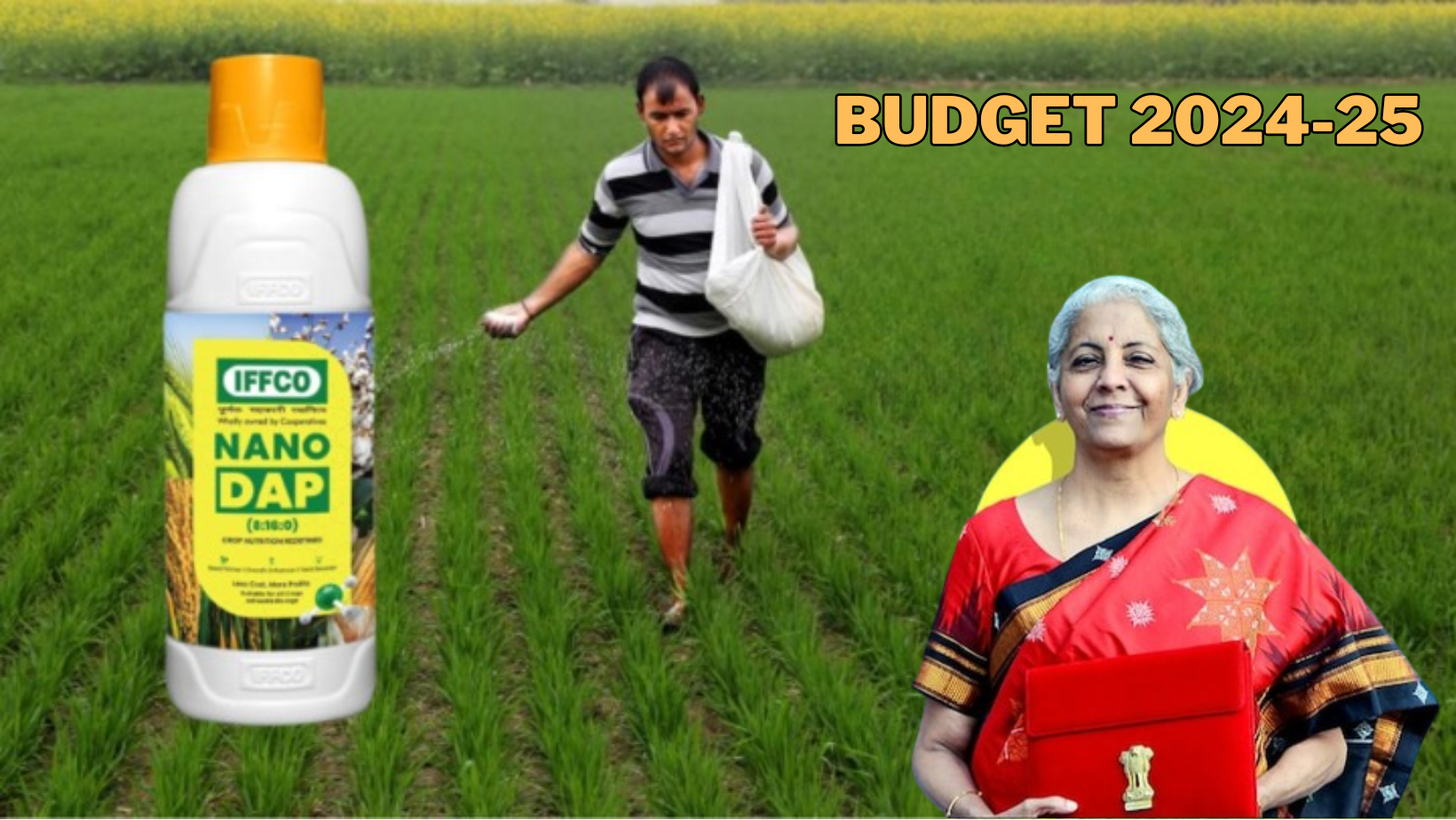
- 02 Feb 2024
Why is it in the News?
Finance Minister Nirmala Sitharaman, presenting the interim budget on (February 1), announced the expansion of the application of Nano DAP on various crops in all agro-climatic zones.
What is DAP?
- Di-ammonium Phosphate (DAP) is a fertilizer containing phosphorus and nitrogen, crucial nutrients for plant growth.
- Its chemical formula is (NH?)?HPO?. DAP is widely utilized in agriculture to offer plants a quick and easily accessible nutrient source.
- It ranks as the second most utilized fertilizer in India, following urea. Notably, DAP is rich in phosphorus (P), which plays a vital role in promoting root establishment and development.
- Application of DAP is typically done just before or at the time of sowing to ensure optimal plant growth and development.
What is Nano DAP?
- Nano DAP is an innovative liquid fertilizer formulation comprising nanoparticles of Diammonium Phosphate (DAP).
- Serving as a rich source of nitrogen and phosphorus, the two primary nutrients crucial for crop growth, Nano DAP offers unique advantages.
- Its small particle size, measuring less than 100 nm, coupled with a high surface area, facilitates easy absorption by plant leaves.
- This novel nano-formulation contributes to enhanced crop growth and yield, decreased environmental impact, and improved profitability for farmers.
Why Nano DAP?
- In addition to being more efficient than conventional DAP, Nano DAP has a few other benefits.
- First, it is more pocket-friendly than its conventional counterpart.
- A 500 ml bottle of Nano DAP, equivalent to a 50-kg bag of conventional DAP, is priced at only Rs 600 (compared to Rs 1,350 for the bag).
- Since the government provides significant subsidies on DAP, the adoption of a more inexpensive fertiliser will likely be a significant relief to the government’s subsidy burden.
- Second, for farmers, Nano DAP is also significantly more convenient.
- Simply put, 500 ml bottles are easier to transport, store, and use than 50kg bags.
- The fertiliser is sprayed on crops, with 250-500 ml of DAP, dissolved in water, required per spray, per acre.
- Most importantly, however, India currently imports significant quantities of fertiliser to meet domestic demand.
- The adoption of domestically-produced Nano DAP — produced in Kalol, Gujarat — is set to significantly reduce this import burden.
- This revolutionary step will not only take Indian agriculture forward in foodgrain production but it will also make India self-reliant in fertiliser production.
- The adoption of Nano DAP will help in achieving self-sufficiency in fertilisers and greatly benefit our farmers.
US Approved Sale of 31 Predator Drones to India (India Today)

- 02 Feb 2024
Why is it in the News?
In a significant development that underscores the deepening strategic partnership between India and the United States, the US State Department has approved a landmark Foreign Military Sale to the Indian government.
News Summary:
- The US Defense Security Cooperation Agency has formally notified the US Congress regarding a potential military sale of MQ-9B SkyGuardian drones and associated equipment to the Government of India.
What is a Drone?
- Drones are aerial vehicles powered by various means, capable of autonomous flight or remote piloting, and can carry payloads, lethal or nonlethal, depending on the mission.
Key Features of MQ-9B SkyGuardian Drones:
- Designed for extended over-the-horizon flights lasting over 30 hours, facilitated by satellite connectivity.
- Incorporates advanced capabilities to safely operate in civilian airspace, facilitating joint operations with civil authorities for real-time situational awareness.
- Equipped with sophisticated maritime intelligence, surveillance, and reconnaissance (ISR) systems, enabling real-time monitoring and patrolling both above and below the ocean's surface.
Significance of Drone Technology in Defense:
- Strategic Importance: Drones offer valuable intelligence, surveillance, and reconnaissance (ISR) capabilities, providing real-time visuals and data to support decision-making processes.
- They also reduce risks to personnel and offer cost-effective alternatives to conventional manned aircraft.
- Tactical Advantages: Drones enable precision strikes with minimal collateral damage, enhance coordination and logistics in challenging terrains, and facilitate operations in remote or hostile environments.
Challenges Associated with Drones:
- Complex Airspace Management: The integration of drones into India's airspace necessitates a robust management framework to ensure safe and efficient operations.
- Adverse Weather Conditions: Factors like strong winds can affect drone operations, highlighting the need for resilient systems capable of operating in varied environmental conditions.
- Privacy and Safety Concerns: There are concerns regarding the potential misuse of drones for breaching privacy and safety regulations, emphasizing the importance of stringent regulations and oversight mechanisms.
Animal Husbandry Infrastructure Development Fund (PIB)
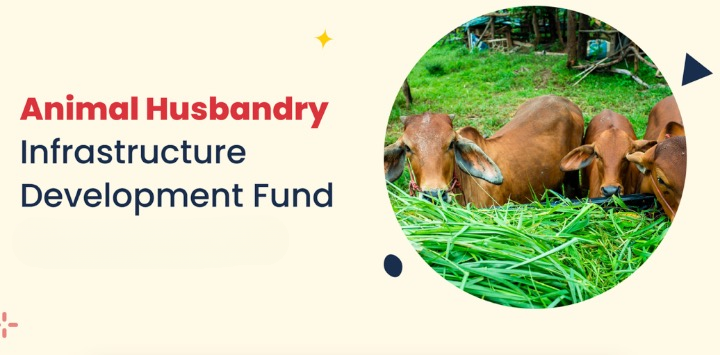
- 02 Feb 2024
Why is it in the News?
The Union Cabinet chaired by Prime Minister Shri Narendra Modi approved the continuation of the Animal Husbandry Infrastructure Development Fund (AHIDF) to be implemented under the Infrastructure Development Fund (IDF) with an outlay of Rs.29,610.25 crore for another three years up to 2025-26.
About the Animal Husbandry Infrastructure Development Fund:
- This initiative operates as a Central Sector Scheme aimed at incentivizing investments from various entities, including individual entrepreneurs, private companies, MSMEs, Farmer’s Producers Organizations (FPOs), and Section 8 companies.
- These investments are directed towards establishing infrastructure for:
- Dairy processing and value addition
- Meat processing and value addition
- Animal feed plants
Objectives:
- Facilitating the expansion of milk and meat processing capacity and diversification of products, thereby granting unorganized rural milk and meat producers greater access to organized markets.
- Enhancing price realization for producers and ensuring the availability of quality milk and meat products for domestic consumers.
- Promoting exports and elevating the sector's contribution to export revenue.
- Providing quality concentrated animal feed to cattle, buffalo, sheep, goat, pig, and poultry, ensuring balanced rations at affordable prices.
- The Government of India offers a 3% interest subvention for a period of 8 years, including a two-year moratorium, for loans covering up to 90% of the investment.
- These loans are accessible from scheduled banks, the National Cooperative Development Corporation (NCDC), NABARD, and NDDB.
- Notably, government entities and cooperatives are excluded from availing benefits under this scheme.
What is Animal Husbandry?
- Animal husbandry encompasses the controlled cultivation, management, and production of domestic animals, with a focus on enhancing desirable qualities through breeding.
- It serves as a vital branch of agriculture dedicated to animals raised for various purposes such as meat, fibre, milk, and other products.
- This involves day-to-day care, selective breeding, and the overall management of livestock.
- In India, animal husbandry plays a crucial role in the livelihoods of many farmers, offering significant self-employment opportunities, particularly for landless labourers, small and marginal farmers, and women.
- The sector contributes to providing affordable and nutritious food to millions of Indians through the production of meat, eggs, milk, and other essential items.
- Additionally, it serves as a valuable source of raw materials such as hides, skins, bones, blood, and fat.
- Animals are often regarded as the best insurance against natural calamities like drought, famine, and other adversities, providing a degree of stability to farmers in unpredictable conditions.
Digital Detox for Responsible Gaming (TOI)

- 02 Feb 2024
Why is it in the News?
The Karnataka government recently said it would launch a 'Digital Detox' initiative in collaboration with the All India Game Developers Forum (AIGDF), with special emphasis on gaming and social media.
What is Digital Detox?
- A digital detox entails voluntarily refraining from using digital devices like smartphones, computers, and social media platforms for a defined period.
- This period can range from a few hours to as long as a week or even a month.
- Research indicates that approximately 25% of smartphone owners aged 18 to 44 cannot recall the last time they were separated from their phones.
Benefits:
- Overcoming Technology Addiction: Studies reveal that around 61% of individuals acknowledge their addiction to the internet and digital screens.
- A digital detox aids in combating this addiction.
- Enhanced Mental Health: Disconnecting from technology can alleviate stress and anxiety, thereby fostering improved mental health and overall well-being.
- Increased Productivity and Creativity: Taking a break from continuous digital engagement bolsters focus and concentration, leading to heightened productivity and creativity.
- Improved Sleep: Excessive screen time has been linked to poor sleep quality. A digital detox helps in promoting better sleep by reducing exposure to blue light and stimulating content.
- Enhanced Communication Skills: Reducing online time allows for more face-to-face interactions, nurturing better communication skills and social connections.
Challenges:
- Feelings of Disconnection: Detox participants may feel disconnected from friends and family members.
- Fear of Missing Out: Participants may experience FOMO (fear of missing out) or anxiety about missing important information.
- Boredom or Restlessness: Detoxes may lead to feelings of boredom or restlessness.
- Withdrawal Symptoms: Some individuals may experience withdrawal symptoms such as anxiety or boredom.
Way forward:
- Start Small: Initiate the detox with shorter periods and gradually extend the duration.
- Inform Others: Notify friends and family about the detox to avoid misinterpretations.
- Engage in Healthy Activities: Utilize detox time for activities like reading, spending time outdoors, or exercising.
- Minimize Notifications: Turn off device notifications and store them out of sight.
- Reward Progress: Offer yourself incentives for achieving detox goals.
Conclusion
Digital dependence can contribute to mental health issues, shorter attention spans, and strained interpersonal relationships. While technology offers convenience and connectivity, excessive screen time exacts a toll. A digital detox presents an opportunity to enhance mental and physical well-being, as well as nurture healthier relationships. With proper planning and commitment, a successful and fulfilling detox experience is achievable.
Improved Fiscal Resilience Amid Modest Tax Buoyancy (Indian Express)

- 02 Feb 2024
Why is it in the News?
The government’s aim to restrict the fiscal deficit to 5.8 per cent of the Gross Domestic Product (GDP) as against 5.9 per cent budgeted earlier for the financial year and the push to restrict the fiscal deficit target to below 4.5 per cent by 2025-26 rides on the back of a strong buoyancy in tax revenues.
What is Tax Buoyancy?
- Tax buoyancy elucidates the correlation between fluctuations in government tax revenue growth and changes in Gross Domestic Product (GDP).
- This concept underscores the intrinsic link between the government's tax earnings and economic expansion.
- Essentially, as the economy accelerates, government tax revenue experiences a corresponding increase.
- Tax buoyancy delineates the responsiveness of tax revenue growth to alterations in GDP, signifying its sensitivity to economic fluctuations.
- A buoyant tax exhibits a revenue surge without necessitating a rise in tax rates, contingent upon factors such as the tax base's magnitude, tax administration efficiency, and the simplicity and rationality of tax structures.
- Typically, direct taxes demonstrate higher buoyancy, being more responsive to GDP growth rates.
What is Tax Elasticity?
- Tax elasticity, akin to tax buoyancy, refers to variations in tax revenue consequent to changes in tax rates.
- For instance, assessing how tax revenue fluctuates when the government reduces corporate income tax from 30 percent to 25 percent illustrates tax elasticity.
- This concept underscores the dynamic relationship between tax rates and revenue generation, reflecting the degree of responsiveness of tax revenue to alterations in tax rates.
About the Laffer Curve:
- The Laffer Curve, pioneered by economist Arthur Laffer in 1974, illustrates the interplay between tax rates and government tax revenue collection.
- This economic theory posits that tax rates exceeding a certain threshold diminish tax revenue by disincentivizing workforce participation.
- It suggests the existence of an optimal tax rate that maximizes total tax revenue.
- By visually depicting the inverse relationship between tax rates and tax revenue, the Laffer Curve highlights the complexities of tax policy and the importance of balancing tax rates to achieve revenue optimization.
RBI Action Against Paytm Payments Bank (Indian Express)

- 01 Feb 2024
Why is it in the News?
The Reserve Bank of India (RBI) recently barred Paytm Payments Bank from offering all its core services — including accounts and wallets — from March, effectively crippling the company’s business.
News Summary
- The Reserve Bank of India (RBI) has directed Paytm Payment Bank to halt accepting money in any customer account, including wallets and prepaid instruments like FASTags, from March 1.
- This action comes due to ongoing non-compliance and significant supervisory concerns highlighted by the RBI.
What Does the RBI Directive Include?
- Barred Services: Paytm Payment Bank is prohibited from offering most of its essential services.
- Account Closure: Paytm cannot accept deposits or top-ups after February 29, and nodal accounts of its parent company, One97 Communications, and Paytm Payments Services, must be terminated by February 29.
- Transaction Settlement: All pending transactions and nodal accounts initiated by February 29 must be settled by March 15.
- Customer Withdrawals: Customers are permitted to freely withdraw or use the money from their Paytm accounts, including savings and current accounts, prepaid instruments, FASTags, etc., within their available balance.
Reasons Behind the Action:
- Ongoing Scrutiny: Paytm Payment Bank has been under RBI scrutiny since 2018.
- Compliance Concerns: While specifics were not disclosed, it's believed the action stems from RBI's concerns about KYC compliance and IT-related issues.
- Data Security: RBI is cautious about safeguarding depositors' money and protecting data.
- Concerns arose when Paytm Payment Bank and its parent company lacked sufficient barriers to prevent unauthorized access to data by China-based entities with indirect stakes in the parent company.
What is a Payments Bank?
- Payment banks function similarly to traditional banks but on a smaller scale and without engaging in credit risk.
- Established based on recommendations from the Nachiket Mor Committee, their primary objective is to promote financial inclusion by providing banking and financial services to underserved areas, including migrant workers, low-income households, and small entrepreneurs.
Legal Framework and Features:
- Registered as public limited companies under the Companies Act 2013 and licensed under Section 22 of the Banking Regulation Act 1949, payments banks operate under various regulations such as the Banking Regulation Act 1949, RBI Act 1934, and Foreign Exchange Management Act 1999.
Key features include:
- Differentiation: Payments banks are distinct from universal banks and operate on a smaller scale.
- Capital Requirement: The minimum paid-up equity capital for payment banks is set at 100 crores, with promoters required to contribute at least 40% during the first five years of operation.
- Permissible Activities: Payments banks can accept deposits up to Rs. 2,00,000, invest in government securities to meet statutory liquidity requirements and provide various banking services such as remittance, mobile payments, ATM/debit cards, and net banking.
- Additionally, they can serve as banking correspondents for other banks.
- Limitations: Payments banks are restricted from issuing loans and credit cards, accepting time deposits or NRI deposits, and establishing subsidiaries for non-banking financial activities.
Blue Economy 2.0 (Indian Express)
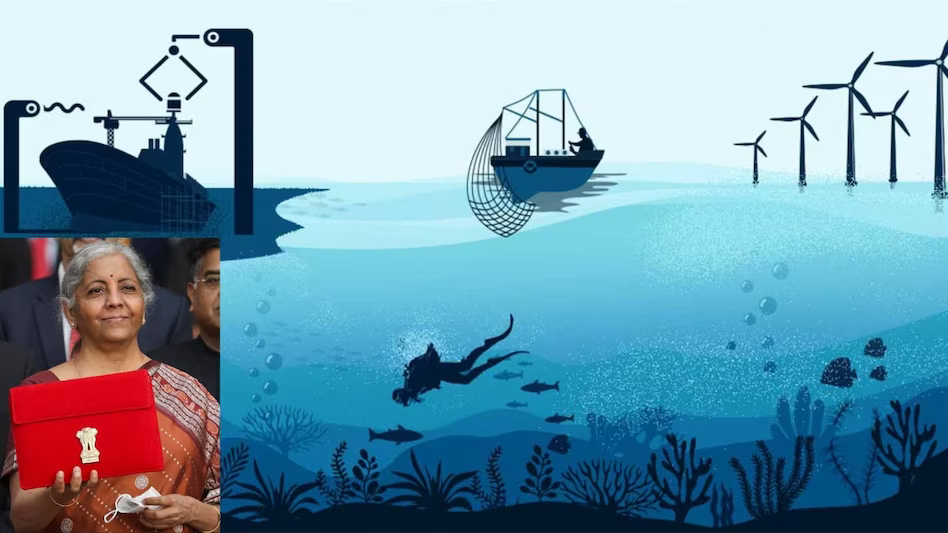
- 01 Feb 2024
Why is it in the News?
The Interim Budget presented by Finance Minister Nirmala Sitharaman on (February 1) stressed environment-friendly development through the promotion of a ‘blue economy’.
What are the Proposals in the Interim Budget Regarding the Blue Economy?
- Finance Minister Nirmala Sitharaman announced plans to launch a scheme focusing on restoration, adaptation measures, coastal aquaculture, and mariculture, adopting an integrated and multi-sectoral approach.
- Restoration and adaptation measures aim to preserve ocean health during economic activities, while aquaculture involves farming aquatic plants and animals, and mariculture focuses on rearing marine creatures in saltwater.
- Additionally, five integrated aqua parks will be established, and the Pradhan Mantri Matsya Sampada Yojana (PMMSY) will be strengthened to increase aquaculture productivity, double exports to Rs 1 lakh crore, and create 55 lakh employment opportunities in the near future.
What is the Blue Economy?
- While the term blue economy can simply refer to economic activities related to the sea and the coasts, it is generally understood to have an element of sustainability in it.
- Thus, the European Commission defines it as “all economic activities related to oceans, seas and coasts.
- It covers a wide range of interlinked established and emerging sectors”; the World Bank says the blue economy is the “sustainable use of ocean resources for economic growth, improved livelihoods, and jobs while preserving the health of ocean ecosystems.”
- For a country like India, with a long coastline, diversity in terms of fish and other ocean produce, and multiple tourism opportunities, the blue economy is highly significant.
Does India Have a Blue Economy Policy?
- The blue economy 2.0. a draft policy framework on India’s Blue Economy was first released in July 2022.
- The policy document contained “key recommendations on National Accounting Framework for Blue Economy and Ocean Governance, Coastal Marine Spatial Planning and Tourism Priority, Marine Fisheries, Aquaculture and Fish Processing.
- Manufacturing, Emerging Industries, Trade, Technology, Services and Skill Development, Logistics, Infrastructure and Shipping, Coastal and Deep-Sea Mining and Offshore Energy and Security, Strategic Dimensions and International Engagement.”
- When the G20 summit was hosted in New Delhi under India’s presidency, the Comptroller & Auditor General of India (CAG) chaired the Engagement Group for Supreme Audit Institutions (SAls) of the member countries in June 2023. Two priorities for the SAI20 deliberations were blue economy and responsible Artificial Intelligence.
CBSE Proposes New Plan For Class 10 & 12 (Indian Express)
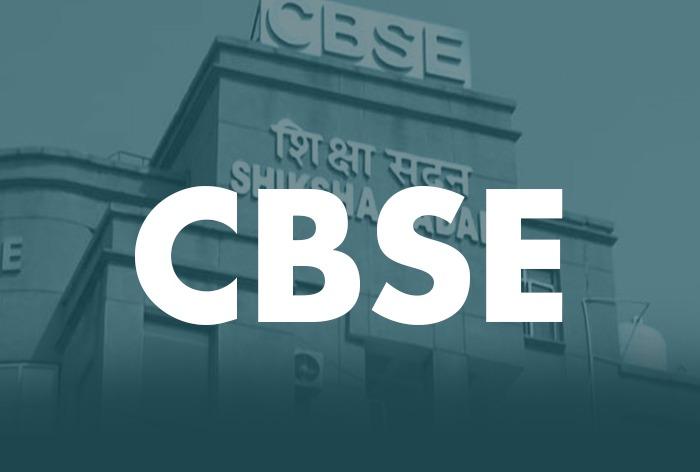
- 01 Feb 2024
Why is it in the News?
CBSE is reported to have proposed significant changes to the academic framework for secondary and higher secondary education, including a shift from studying two languages to three in Class 10, with the requirement that at least two must be native Indian languages.
Key Highlights of the Proposal:
Proposed Changes for Class 10:
- Transition from studying two languages to three, with a stipulation that at least two must be native Indian languages.
- Potential requirement for students to pass in 10 subjects, contrasting with the current mandate of five.
Proposed Changes for Class 12:
- Shift to studying two languages instead of one, with the condition that at least one must be a native Indian language.
- Introduction of a necessity to clear examinations in six subjects for high school graduation, up from the existing requirement of five.
The objective behind the Proposed Changes:
- These modifications are part of CBSE's broader initiative to implement a national credit framework in school education, addressing the absence of a formalized credit system in the standard curriculum.
Academic Year and National Learning Hours:
- According to the CBSE plan, an academic year will comprise 1200 notional learning hours, equivalent to earning 40 credits.
- Notional learning denotes the specified time required for an average student to achieve set outcomes.
- This encompasses both academic learning at school and non-academic or experiential learning outside of it.
Storage of Earned Credits:
- The scheme of studies has been adjusted to outline teaching hours and credits earned for each subject.
- These earned credits will be digitally stored in the Academic Bank of Credits, accessible through a linked Digilocker account.
What is the National Credit Framework (NCrF)?
- The draft NCrF was introduced by the Union Ministry of Education (MoE) in 2022, based on recommendations from an inter-ministerial committee.
- It serves as a guideline for schools, colleges, and universities to adopt the credit system, marking the inclusion of the entire school education system under its purview.
- Previously, only the National Institute of Open Schooling (NIOS) followed a credit system, but the NCrF extended its coverage to include skill and vocational education.
Proposed Benefits of NCrF for Various Stakeholders:
- Students:
- Facilitates multidisciplinary education with flexible curricula.
- Eliminates distinctions between different streams like arts, science, social sciences, and commerce.
- Rewards students with credits for academic, skill, and experiential learning.
- Expands core learning to encompass both foundational and cognitive aspects.
- Institutions:
- Fosters collaboration between institutions.
- Simplifies and standardizes credit mechanisms.
- Emphasizes research and innovation.
- Utilizes institutional infrastructure efficiently.
- Government:
- Expected to increase student enrollment rates.
- Complements India's demographic dividend, aiming to become the Skill Capital of the World.
- Industry:
- Enables students to acquire NSQF-approved foundational skills from the industry, enhancing employability.
- Allows for quick educational upgradation and up-skilling through micro-credentials.
Significance of NCrF:
- Aligns with the vision of the National Education Policy (NEP) 2020 by integrating academic and vocational domains for flexibility and mobility.
- Facilitates re-entry into the education system for students who have dropped out.
- Promotes Recognition of Prior Learning, acknowledging skills acquired informally through various means.
Enforcement Directorate (ED) Arrests Jharkhand CM in a Corruption Case (Indian Express)
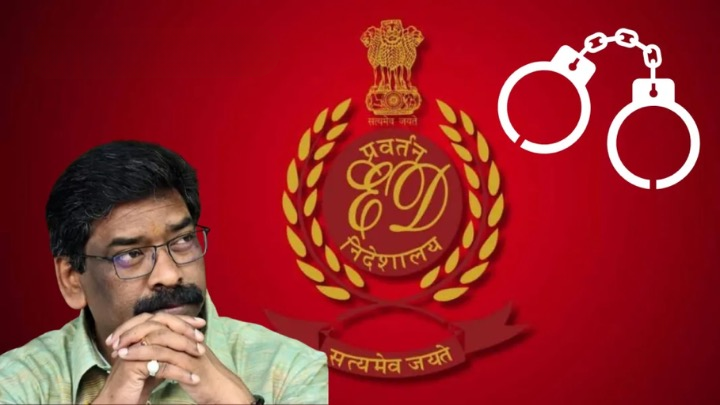
- 01 Feb 2024
Why is it in the News?
Recently Jharkhand CM Hemant Soren was arrested by the officials of the Enforcement Directorate (ED) in the land scam case.
News Summary:
- Jharkhand CM Hemant Soren became the third state chief minister to be arrested after the Enforcement Directorate took him into custody in a money laundering case.
- Before Hemant Soren, his father Shibu Soren and Madhu Koda were arrested.
- He was arrested in a case related to an illegal change of ownership of land in Jharkhand.
What is the Enforcement Directorate (ED)?
- The Enforcement Directorate (ED) is a multi-disciplinary agency tasked with investigating money laundering offenses and violations of foreign exchange laws.
- It operates under the Department of Revenue within the Ministry of Finance and upholds strict compliance with the Constitution and laws of India.
Structure:
- Headquarters: Located in New Delhi, the ED is headed by the Director of Enforcement.
- Regional Offices: The agency has five regional offices situated in Mumbai, Chennai, Chandigarh, Kolkata, and Delhi, each overseen by Special Directors of Enforcement.
- Recruitment: Officers are recruited directly and transferred from other investigative agencies, comprising personnel from the Indian Revenue Services (IRS), Indian Police Services (IPS), and Indian Administrative Services (IAS), including roles such as Income Tax officers, Excise officers, Customs officers, and police officials.
- Tenure: Typically, officers serve a two-year term, extendable to five years with three annual extensions.
- Amendments to the Delhi Special Police Establishment (DSPE) Act, 1946, and the Central Vigilance Commission (CVC) Act, 2003, enable the government to extend the tenure of directors for one year after completing their initial two-year terms.
Functions:
- COFEPOSA: Empowered by the Conservation of Foreign Exchange and Prevention of Smuggling Activities Act, 1974 (COFEPOSA), the ED can initiate cases of preventive detention related to violations of the Foreign Exchange Management Act (FEMA).
- Foreign Exchange Management Act, 1999 (FEMA): This civil law aims to regulate external trade and payments, with the ED responsible for investigating suspected contraventions, adjudicating cases, and imposing penalties.
- Prevention of Money Laundering Act, 2002 (PMLA): Enacted to combat money laundering, the ED is tasked with tracing assets derived from crime proceeds, attaching property, and prosecuting offenders through Special Courts.
- Fugitive Economic Offenders Act, 2018 (FEOA): Introduced to address economic offenders seeking refuge abroad, the ED enforces this law by attaching properties of fugitives and confiscating assets, thereby deterring offenders from evading Indian law.
5 Wetlands Added to The Global List of Wetlands of International Importance under Ramsar Convention (TOI)
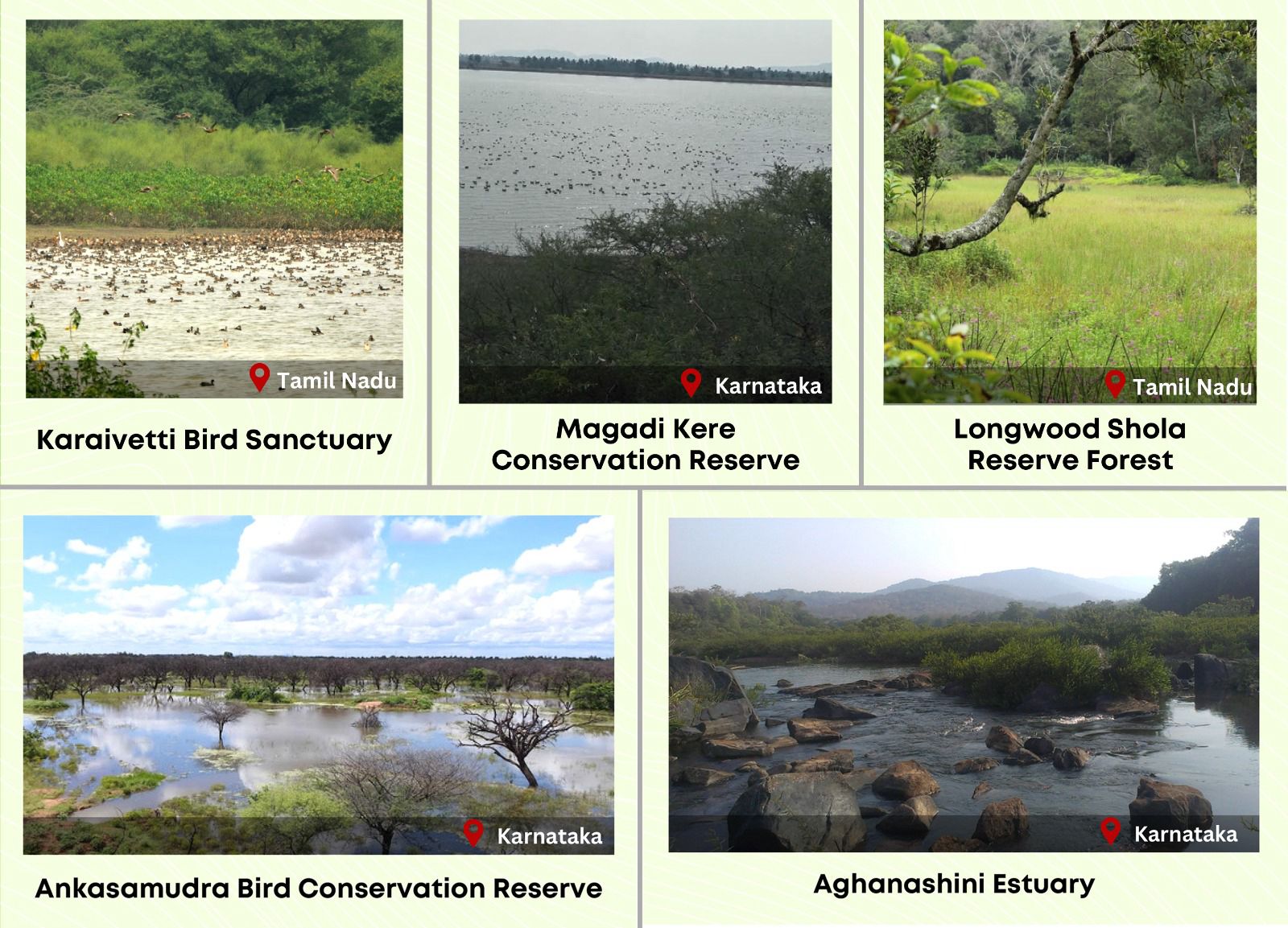
- 01 Feb 2024
Why is it in the News?
Ahead of World Wetlands Day, five more wetlands in India got the tag of international importance under the Ramsar Convention, making it the fourth largest country in terms of the number of sites on the list.
About the New Ramsar sites:
- The five newly added Indian sites in the list are Karaivetti Bird Sanctuary and Longwood Shola Reserve Forest in Tamil Nadu, and Magadi Kere Conservation Reserve, Ankasamudra Bird Conservation Reserve and Aghanashini Estuary in Karnataka.
- In India, Tamil Nadu continues to have the maximum number of Ramsar sites (16) followed by Uttar Pradesh (10).
- Karaivetti Bird Sanctuary (Tamil Nadu): Karaivetti Bird Sanctuary is one of the largest inland wetlands of Tamil Nadu and is a significant source of groundwater recharge for the area.
- Water from the wetland is utilized by the villagers for cultivating crops such as paddy, sugar cane, cotton, corn, and split red gram.
- Karaivetti has one of the largest congregations of waterbirds in the State of Tamil Nadu.
- The Longwood Shola Reserve Forest (Tamil Nadu): The Longwood Shola Reserve Forest derives its name from the Tamil word, "Solai", which means ‘tropical rainforest’.
- The ‘Sholas’ are found in the upper reaches of the Nilgiris, Anamalais, Palni hills, Kalakadu, Mundanthurai and Kanyakumari in Tamil Nadu.
- These forested wetlands serve as habitats for the globally endangered Black-chinned Nilgiri Laughing thrush (Strophocincla cachinnans), Nilgiri Blue Robin (Myiomela major), and vulnerable Nilgiri Wood-pigeon (Columba elphinstonii).
- As many as 14 out of 26 endemic bird species of the Western Ghats are found in these wetlands.
- Ankasamudra Bird Conservation Reserve (Karnataka): Ankasamudra Bird Conservation Reserve is a human made Village Irrigation Tank built centuries back and is spread over an area of 98.76ha.
- It is an ecologically important wetland, rich in biodiversity, comprising over 210 species of plants, mammal species, reptiles, birds etc.
- It supports more than 1% of the biogeographic population of Painted Stork and Black-headed Ibis.
- Aghanashini Estuary (Karnataka): Aghanashini Estuary is formed at the confluence of the Aghanashini River with the Arabian Sea.
- The brackish water of the Estuary provides diverse ecosystem services including flood and erosion risk mitigation, biodiversity conservation and livelihood support.
- The wetland also provides livelihoods to families by supporting fishing, agriculture, collection of edible bivalves and crabs, shrimp aquaculture, traditional fish farming in the estuarine rice fields (locally known as Gazni rice fields), bivalve shell collection and salt production.
- Magadi Kere Conservation Reserve (??Karnataka): Magadi Kere Conservation Reserve, is a human-made wetland with an area of nearly 50 hectares which was constructed to store rainwater for irrigation purposes.
- The wetland harbors two vulnerable species, namely the Common pochard and River tern and four near-threatened species, namely the Oriental Darter Black-headed Ibis Woolly-necked Stork and Painted Stork.
- It is also one of the largest wintering grounds for the Bar-headed goose (Anser indicus) in Southern India.
- The wetland is a designated Important Bird Area (IBA) and is also listed as a priority area for conservation in India.
What is the Ramsar Convention?
- The Ramsar Convention was signed on 2nd February 1971 to preserve the ecological character of their wetlands of international importance.
- It is named after Ramsar, the Iranian city where the treaty was signed in 1971, and places chosen for conservation under it are given the tag ‘Ramsar site’.
- The World Wetlands Day, celebrated on 2 February to raise global awareness about the importance of wetlands for human prosperity and a healthy planet.
India Ranks 93 on Corruption Perceptions Index 2023 (The Hindu)
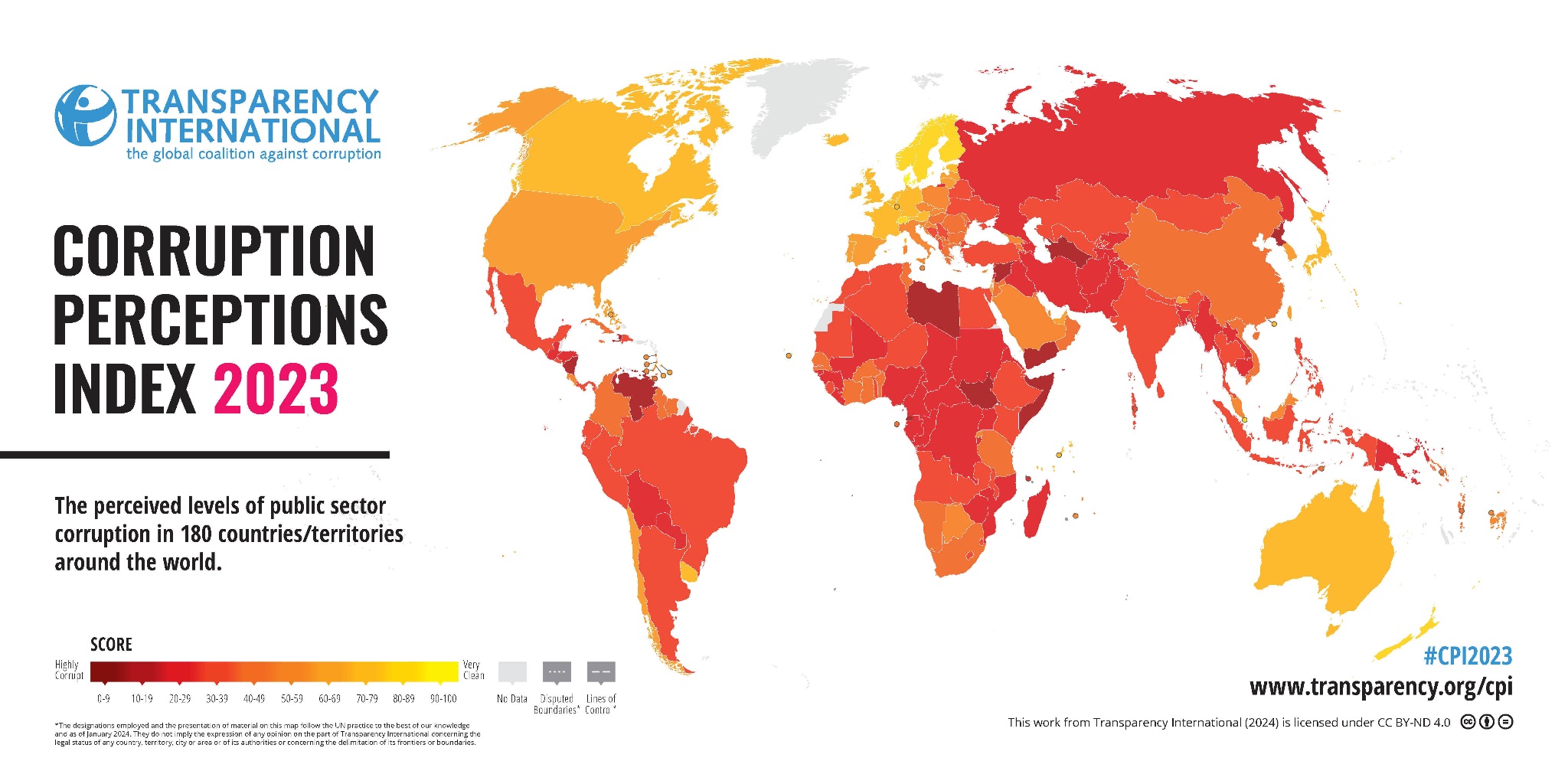
- 31 Jan 2024
Why is it in the News?
India ranked 93 out of 180 countries on the corruption perceptions index for 2023 as its overall score remained largely unchanged, according to a Transparency International report.
Key Facts About Corruption Perceptions Index 2023:
- India ranked 93 out of 180 countries on the corruption perceptions index for 2023 tied with Maldives, Kazakhstan, and Lesotho also ranking at 93 out of 180 countries.
- In 2023, India's overall score was 39 while in 2022, it was 40.
- India's rank in 2022 was 85.
- Denmark (90) tops the index for the sixth consecutive year, with Finland and New Zealand.
- In South Asia, both Pakistan (133) and Sri Lanka (115) grapple with their respective debt burdens and ensuing political instability.
- Bangladesh (149) emerges from the least developed country (LDC) status, with economic growth supporting a continued reduction in poverty and improving living conditions.
- China (76), with its aggressive anti-corruption crackdown, has punished more than 3.7 million public officials for corruption over the last decade.
- Somalia (11), Venezuela (13), Syria (13), South Sudan (13) and Yemen (16) take the bottom spots in the index.
What is the Corruption Perceptions Index (CPI)?
- The Corruption Perceptions Index (CPI) scores and ranks countries/territories based on how corrupt a country’s public sector is perceived to be by experts and business executives.
- It is a composite index, a combination of 13 surveys and assessments of corruption, collected by a variety of reputable institutions including the World Bank, World Economic Forum, private risk and consulting companies, think tanks and others.
- The CPI ranks 180 countries and the results are given on a scale of 0 (highly corrupt) to 100 (very clean).
- The CPI is released annually by Transparency International, an independent nonprofit organization that aims to fight corruption, especially in the public sector.
- Transparency International is a global independent, nongovernmental nonprofit organization (NPO) that aims to stop corruption by promoting transparency in various sectors of society.
- The organization's international secretariat is located in Berlin and it has national chapters in more than 100 countries.
- The agency is funded through donations from governments, individuals, private donors, and other organizations.
- The organisation conducts research, and advocacy work, and undergoes various projects in its fight against corruption.
- In 1995, the organization created the first Corruption Perceptions Index, ranking 45 countries based on how much corruption they were perceived to have in the public sector.
Economic Impact of Corruption:
- Corruption continues to be a big hurdle to political, economic, and social development.
- Those who are economically challenged are the most affected by the effects of corruption and related fraud.
- That's because they often rely heavily on public services and can't afford to pay bribes.
- The International Finance Corporation also cites increases in the cost of business as a result of corruption.
Elon Musk's Neuralink implants Brain Chip in First Human (Indian Express)
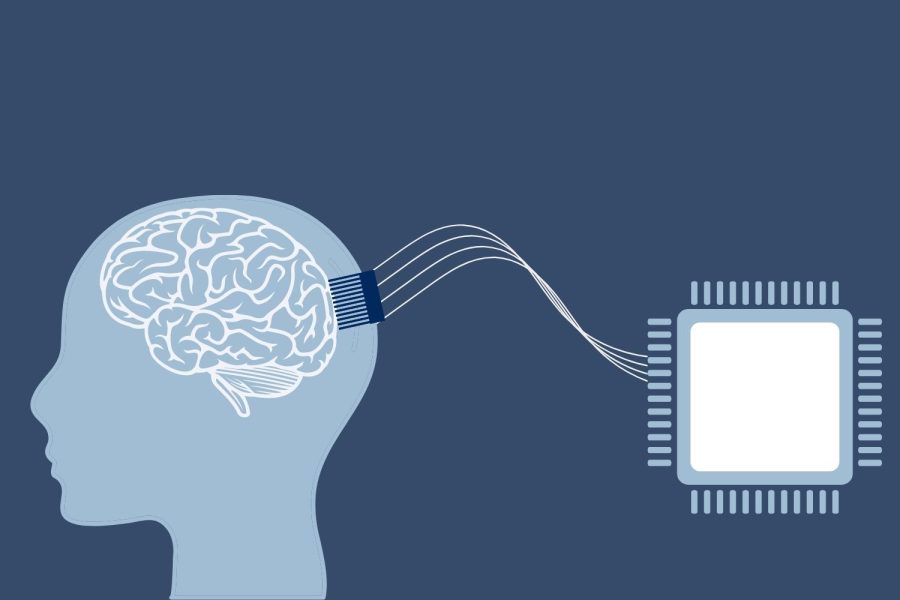
- 31 Jan 2024
Why is it in the News?
Recently, Elon Musk announced his brain chip company, Neuralink, has completed its first implant on a human patient.
What is Neuralink?
- Neuralink is an upcoming medical device called a brain-computer interface that can help paralysed persons or amputees regain some sense of movement.
- It will decode signals from a part of the brain that plans movements.
- These signals will then be used to control external devices such as computers and mobile phones, allowing the participants to browse the web or play online games with just their thoughts even as their limbs are immobile.
- Under the PRIME Study (short for Precise Robotically Implanted Brain-Computer Interface) an N1 implant will be surgically placed by an R1 robot in the brain.
- The N1 implant has 1,024 electrodes distributed across 64 threads that are thinner than human hair.
- The R1 robot has been designed to insert these threads very accurately in a specific region of the brain.
Current Scenario in the Brain-Computer Interface?
- Recent breakthroughs in brain-computer interfaces have led to remarkable advancements, including systems capable of translating neural signals into speech at nearly the speed of natural speech and bi-directional interfaces that offer sensory feedback to the brain.
- In a notable development, researchers in Switzerland documented a case involving a man paralyzed from the waist down who regained the ability to walk.
- This feat was achieved through the use of a digital bridge that bypassed the damaged portion of his spinal cord.
- By employing a brain-spine interface, the signals from his brain were converted into stimulation for his spine, enabling him to walk again.
- While it may take several years before such devices are commercially available, the scientific progress in this field is remarkable.
- These advancements hold promise for individuals paralyzed due to accidents, offering potential mobility with the assistance of spinal implants.
What are the Challenges?
- One of the main challenges of the technology is establishing the connection between the brain and the chips, allowing it to reliably interpret the signals from the brain.”
- The use of conventional electronics for developing brain-computer interfaces results in a “mismatch with the soft tissue of the brain.”
- This can lead to tissue damage and immune response to the sensors.
- Flexible electronics with tissue-like properties can help build interfaces that do not face these problems.
- It can also help the systems adapt to changes in the brain volume during development, ageing and disease.
Eravikulam National Park to Close From February 1 for Nilgiri Tahr Breeding Season (The Hindu)
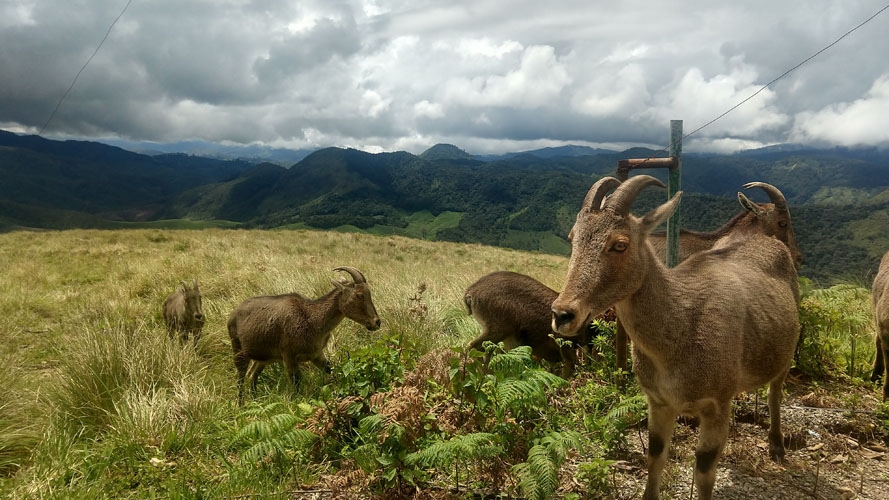
- 31 Jan 2024
Why is it in the News?
The Eravikulam National Park (ENP), the natural habitat of the Nilgiri tahr, will be closed for the calving season of the species from February 1 to March 31.
About Eravikulam National Park:
- Eravikulam National Park also known as Rajamala National Park, is located in Kerala's Idukki district.
- The park is administered under the Kerala Forest and Wildlife Department and became a National park in 1978.
- It is a 97 km2 national park located along the Western Ghats, Kerala.
- Anamudi, the highest peak in south India was located on the southern side of the park.
- This is also the land of "Neelakurinji", a flower that blooms once in twelve years.
- Wildlife in the Park: The park holds the maximum viable population of the endangered Nilgiri Tahr including other little-known fauna Nilgiri marten, ruddy mongoose, small clawed otter, dusky striped squirrel etc.
- Flora: Important flora includes Microtropis ramiflora, Actinodaphne bourdilloni, Pittosporum tetraspermium, Chrysopogon Zelanieus, Strobilanthus Kunthianus (Neela Kurinji) etc.
- Mostly the park is busted with rolling grasslands, but several patches of shola forests are also found in the upper part of the valley.
- The shola grasslands are exceptionally rich in balsams and orchids including the long thought extinct variety Brachycorythis wightii.
- The Atlas moth, the largest of its kind in the world, is seen in this park.
Key Facts about Nilgiri Tahr:
- Nilgiri Tahr is a rare mountain animal found only in the southern part of the Western Ghats.
- Scientific Name: Nilgiritragus hylocrius
- Local Name: Varayaadu
- They are famous for their ability to climb steep cliffs, which has earned them the nickname Mountain Monarch.
- It is the official state animal of Tamil Nadu.
- Distribution: Nilgiri Tahrs are mainly found in Kerala and Tamil Nadu, covering only about 5% of the Western Ghats.
- Eravikulam National Park in Kerala is home to the largest population of Nilgiri Tahrs.
- Habitat: They live in open grasslands at elevations between 1200 and 2600 meters in the South Western Ghats.
- Characteristics: Nilgiri Tahrs have a sturdy body with short, coarse fur and a rough mane.
- Both males and females have curved horns, with males having larger horns, up to 40 cm long.
- Adult males have a light grey area on their backs, known as a 'saddle,' hence the name 'saddlebacks.'
- They have a short grey-brown or dark coat.
- Conservation Status:
- IUCN Red List: Endangered
- Protected under the Wildlife (Protection) Act of India, 1972: Schedule I
Employer Rating Survey to Assess Women Participation in Workforce (Business Standard)
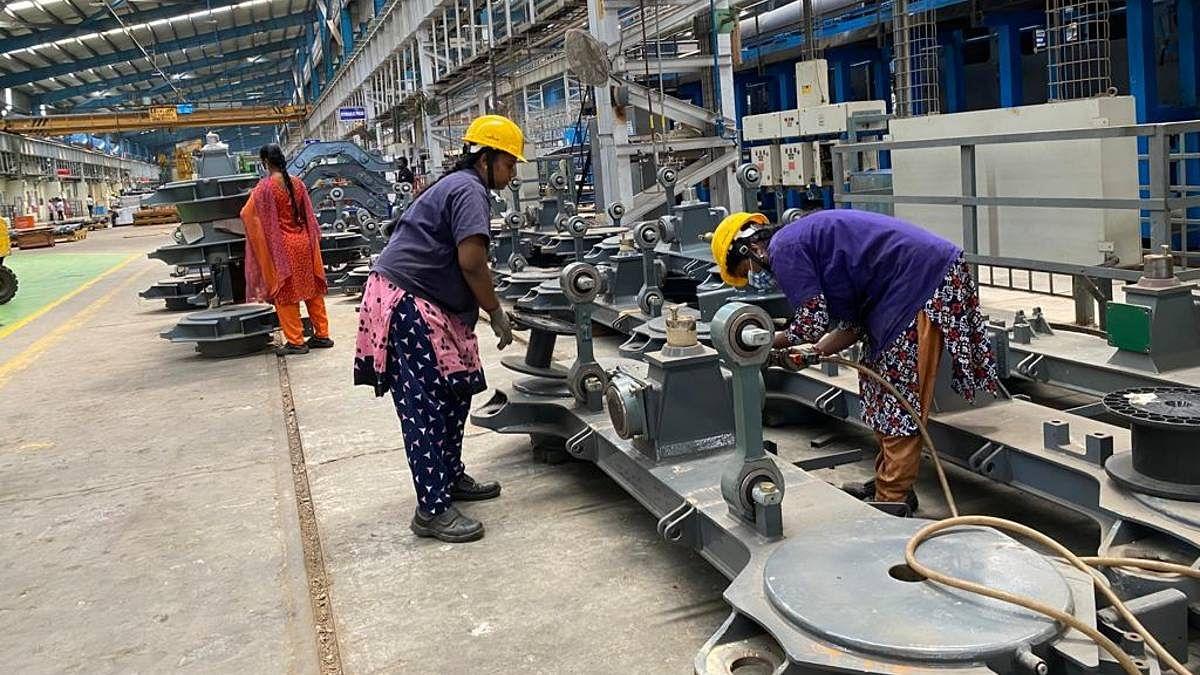
- 31 Jan 2024
Why is it in the News?
To bolster the representation of women in the workforce and advance gender equality, various ministries of the central government issued a series of advisories and surveys on Tuesday, aimed at industries and employers.
About the Survey:
- This survey aims to evaluate the prevalence of women-friendly practices across the nation's workplaces.
- The government is collecting information on several key aspects, including the establishment of internal complaints committees (ICC) for preventing sexual harassment, the provision of childcare facilities, ensuring pay equity, offering flexible or remote work options for women, and providing safe transportation during late hours.
- Additionally, various ministries of the Central government have issued advisories to enhance women's representation in the workforce.
Factors Affecting Low Women Workforce Participation:
- Cultural and Social Norms: Traditional gender roles and societal expectations often discourage women from pursuing full-time employment due to responsibilities for caregiving and homemaking, limiting their participation in the workforce.
- Educational Barriers: Limited access to quality education can hinder women from acquiring the necessary skills and qualifications for certain jobs, further reducing their workforce participation.
- Gender Pay Gap: Disparities in wages between men and women discourage women from entering or remaining in the workforce, contributing to lower participation rates.
- Structural Constraints: India's manufacturing and service sectors often have rigid structures that limit employment opportunities, particularly in the informal sector where many women work.
- Security Concerns: Instances of sexual harassment in the workplace create safety concerns for women, acting as a barrier to their participation in the labour force.
Government Initiatives Supporting Women's Empowerment:
- Code on Wages, 2019: Ensures equal pay for equal work without discrimination based on gender, fostering fairness in wage practices across establishments.
- Code on Occupational Safety, Health And Working Conditions (OSH), 2020: Proposes amendments to improve employment conditions for women workers, particularly in above-ground mines, ensuring their safety and well-being.
- Maternity Benefit Act, 2017: Enhances maternity benefits and fosters a healthier work environment for pregnant and nursing women, promoting their well-being and work-life balance.
- Rashtriya Mahila Kosh (RMK): A national organization offering microfinance services to empower economically disadvantaged women, supporting their livelihood projects and economic independence.
- National Rural Livelihoods Mission (NRLM): Focuses on creating sustainable self-employment opportunities for rural women through skill training, capacity building, and financial assistance, enabling them to engage in income-generating activities.
- MGNREGA (Mahatma Gandhi National Rural Employment Guarantee Act): Guarantees 100 days of wage employment annually to rural households, actively encouraging women's participation and ensuring equitable employment opportunities.
Way Forward
Continued government initiatives aimed at empowering women in the workforce through skill development and expanded employment opportunities have yielded positive results, as evidenced by the Periodic Labour Force Survey (PLFS) released by the Labour Bureau in 2023. This survey indicated a notable increase in women's participation, rising from 23.3% in 2017-18 to 37% in 2022-23.
Draft Indian Stamp Bill, 2023 (Indian Express)
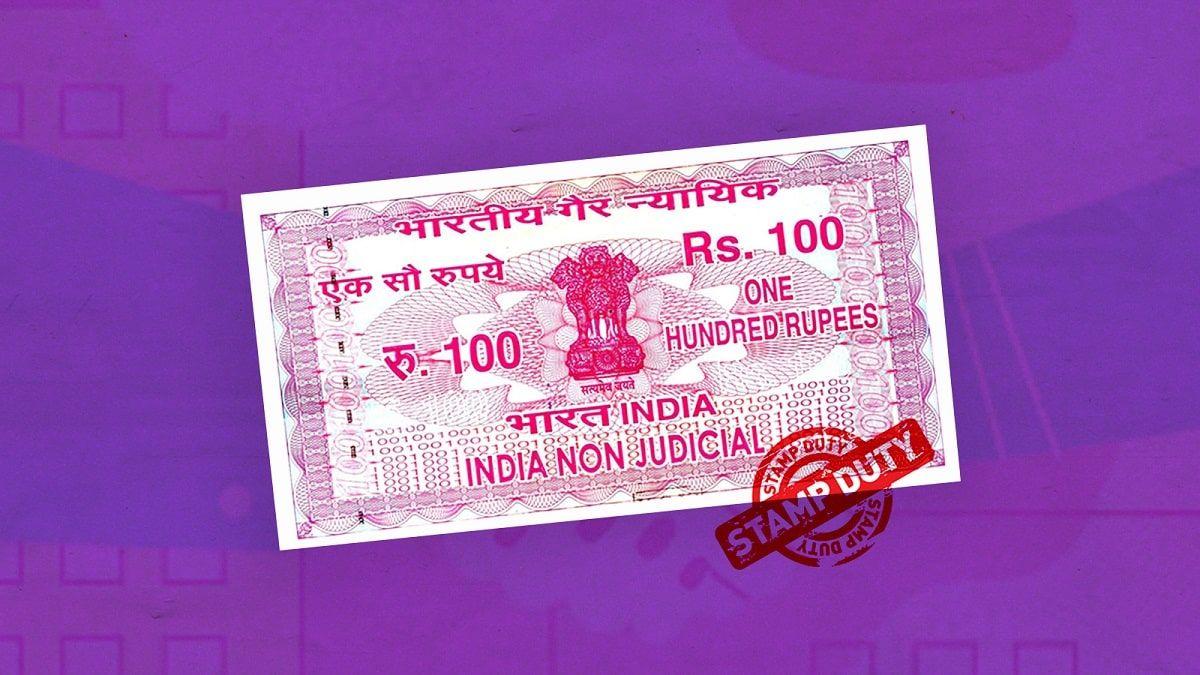
- 31 Jan 2024
Why is it in the News?
The Centre has proposed repealing the Indian Stamp Act, of 1899 and bringing in a new law for the stamp duty regime in the country.
What is Stamp Duty?
- A stamp duty is essentially a government tax, which is levied to register documents, like an agreement or transaction paper between two or more parties, with the registrar.
- Usually, the amount specified is fixed based on the document’s nature or is charged at a certain percentage of the agreement value stated in the document.
- Stamp duties can be levied on bills of exchange, cheques, promissory notes, bills of lading, letters of credit, policies of insurance, transfer of shares, debentures, proxies and receipts.
- Accepted as valid evidence in a court of law, stamp duties are levied by the Centre but appropriated by the concerned states within their territories under Article 268 of the Constitution.
Notable Provisions of the Draft Indian Stamp Bill, 2023:
Several provisions of the Indian Stamp Act, of 1899 have now become “redundant” or “inoperative” Therefore, the ministry has proposed repealing the existing Act and substituting it with new legislation to “reflect the present realities and objectives.”
- The draft Bill has introduced provisions for digital e-stamping.
- “Electronic stamp” or “e-stamp” means an electronically generated impression denoting the payment of stamp duty by electronic means or otherwise, according to Section 2 (18) of the Bill.
- There are also provisions for digital signatures.
- Section 2 (17) of the Bill states that the words “executed” and “execution”, used for instruments, will mean “signed” and “signature” and include attribution of electronic records and electronic signatures, as defined under the Information Technology (IT) Act, 2000.
- The IT Act defines “electronic records” as “data, record or data generated, image or sound stored, received or sent in an electronic form or micro film or computer generated microfiche.”
- Meanwhile, digital or electronic signature refers to the authentication of any electronic record by a subscriber through an electronic method or procedure.
- The draft Bill also proposes to raise penalties.
- It seeks to increase the maximum penalty amount from Rs 5,000 to Rs 25,000 for contravening any provisions of the law and impose Rs 1,000 per day for repeated offences.
What is the Indian Stamp Act, of 1899?
- The Indian Stamp Act, of 1899 is a fiscal or money-related statute that lays down the law relating to tax levied in the form of stamps on instruments recording transactions.
- Under Section 2 of the Act, an instrument includes every document by which any right or liability is or purports to be, created, transferred, limited, extended, extinguished or recorded.
- According to this Act, a “stamp” has been defined as “any mark, seal or endorsement by any agency or person duly authorised by the State Government, and includes an adhesive or impressed stamp, for the purposes of duty chargeable under this Act”.
- Section 3 of the 1899 Act prescribes that certain instruments or documents shall be chargeable with the amount indicated in Schedule 1 of the Act.
- These include bills of exchange or promissory notes.
Framework for Voluntary Carbon Market in Agriculture Sector (Down To Earth)

- 30 Jan 2024
Why is it in the News?
The central government recently launched a framework to promote voluntary carbon markets in the agriculture sector.
What are Carbon Markets?
- Carbon markets are trading systems in which carbon credits are sold and bought.
- Companies or individuals can use carbon markets to compensate for their greenhouse gas emissions by purchasing carbon credits from entities that remove or reduce greenhouse gas emissions.
- One tradable carbon credit equals one tonne of carbon dioxide or the equivalent amount of a different greenhouse gas reduced, sequestered or avoided.
- When a credit is used to reduce, sequester, or avoid emissions, it becomes an offset and is no longer tradable.
Why are Carbon Markets Important?
- Scientists warn that 2°C of warming will be exceeded during the 21st century unless we achieve deep reductions in GHG emissions now.
- Effective action will require concerted and sufficient investment, knowing also that the costs of inaction will be far higher.
- The latest IPCC report finds all countries are falling way short, with financial flows three to six times lower than levels needed by 2030 – and even starker differences in some regions of the world.
- Many countries are turning to carbon markets as a key component in driving and financing the necessary transformation to tackle the climate crisis.
How Many Types of Carbon Markets Are There?
- There are broadly two types of carbon markets: compliance and voluntary.
- Compliance markets are created as a result of any national, regional and/or international policy or regulatory requirement.
- Voluntary carbon markets (VCM)– national and international – refer to the issuance, buying and selling of carbon credits, on a voluntary basis.
- The current supply of voluntary carbon credits comes mostly from private entities that develop carbon projects, or governments that develop programs certified by carbon standards that generate emission reductions and/or removals.
Importance of Establishing a VCM Framework in the Agricultural Sector:
- Emission Concerns: Agriculture in India contributes approximately 15% of the nation's greenhouse gas emissions, highlighting the urgent need for mitigation strategies.
- Vulnerability: With around 50% of cultivated land being rainfed and more than 80% of farmers categorized as small or marginal, the sector is highly susceptible to the impacts of climate change.
- National Mission on Sustainable Agriculture (2010): This initiative focuses on promoting adaptation measures such as agroforestry, micro irrigation, and soil health management, which not only reduce emissions but also offer opportunities for carbon sequestration.
- Additional Income Opportunities: Through the implementation of these practices, farmers can potentially generate additional income streams.
'Maratha Military Landscapes' to be India's nomination for UNESCO World Heritage List for 2024-25 (The Hindu)
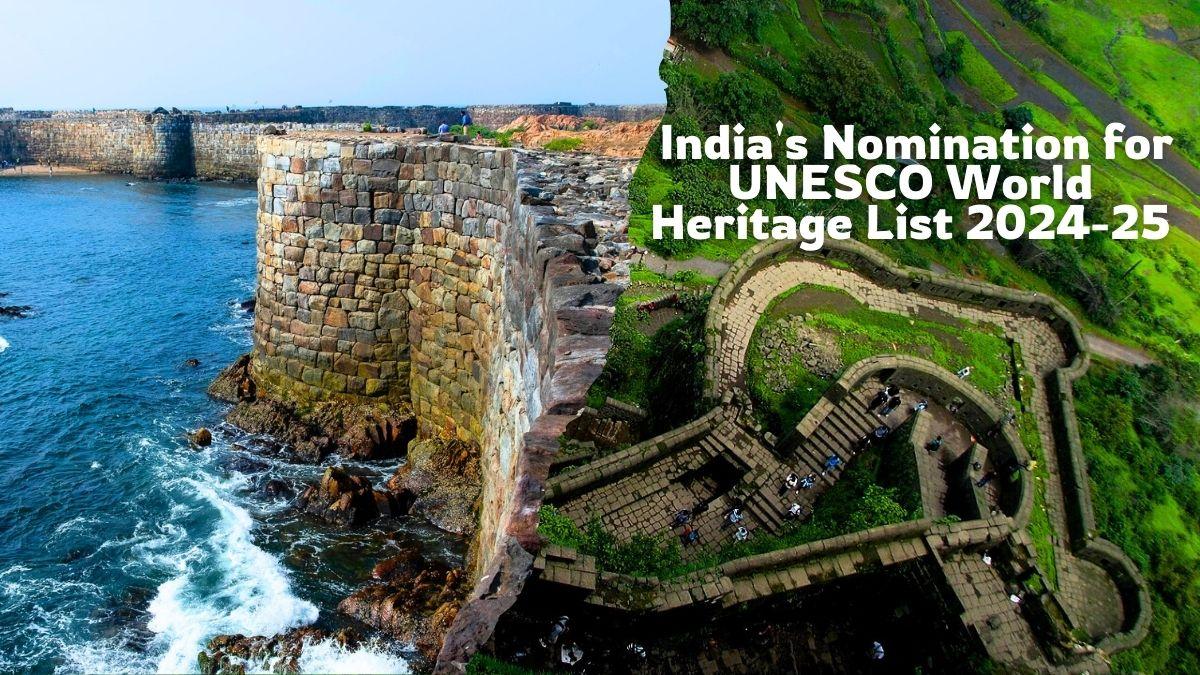
- 30 Jan 2024
Why is it in the News?
'Maratha Military Landscapes' representing extraordinary fortification and military system envisioned by the Maratha rulers will be India's nomination for inclusion in the UNESCO World Heritage List for the 2024-25 cycle, the Culture Ministry said on January 29.
About Maratha Military Landscapes:
- Developed between the 17th and 19th centuries, the nomination comprises the 12 components of Salher Fort, Shivneri Fort, Lohgad, Khanderi Fort, Raigad, Rajgad, Pratapgad, Suvarnadurg, Panhala Fort, Vijaydurg, Sindhudurg in Maharashtra, and Gingee Fort in Tamil Nadu.
- These components are strategically distributed across diverse geographical and physiographic regions, highlighting the military prowess of the Maratha rule.
- The landscapes showcase the integration of landscape, terrain, and physiographic characteristics distinctive to the Sahyadri mountain ranges, the Konkan Coast, the Deccan Plateau, and the Eastern Ghats in the Indian Peninsula.
- Out of the more than 390 forts in Maharashtra, only 12 have been chosen under the 'Maratha Military Landscapes of India'.
- The inception of the Maratha Military ideology dates back to the 17th century during the reign of the Maratha King Chhatrapati Shivaji Maharaj, continuing through subsequent rules until the Peshwa rule of 1818 CE.
UNESCO Nomination Criteria:
- There are two categories of nomination- cultural and natural criteria.
- The Maratha Military Landscapes is nominated under cultural criteria.
- To fulfil this criterion, a site should bear unique testimony to cultural tradition, it should be an outstanding example of a type of building, architectural or technological ensemble, or landscape that illustrates significant stage(s) in human history and it should be directly or tangibly associated with events or living traditions, ideas or beliefs, artistic and literary works of outstanding universal significance.
World Heritage Sites In India:
- India presently boasts 42 World Heritage sites, with 34 cultural sites, 7 natural sites, and 1 mixed site.
- Maharashtra alone has six World Heritage Sites including:
- The Ajanta Caves
- Ellora Caves
- Elephanta Caves
- Chhatrapati Shivaji Maharaj Terminus
- Victorian Gothic and Art Deco Ensembles of Mumbai, and
- The Western Ghats (a natural site)
Tentative List Recognition:
- The Maratha Military Landscapes of India, included in the Tentative List of World Heritage sites in 2021, is the sixth cultural property nominated for inclusion in the World Heritage List from Maharashtra.
Govt Brings Non-urea Fertilisers Under Price Control (Indian Express)
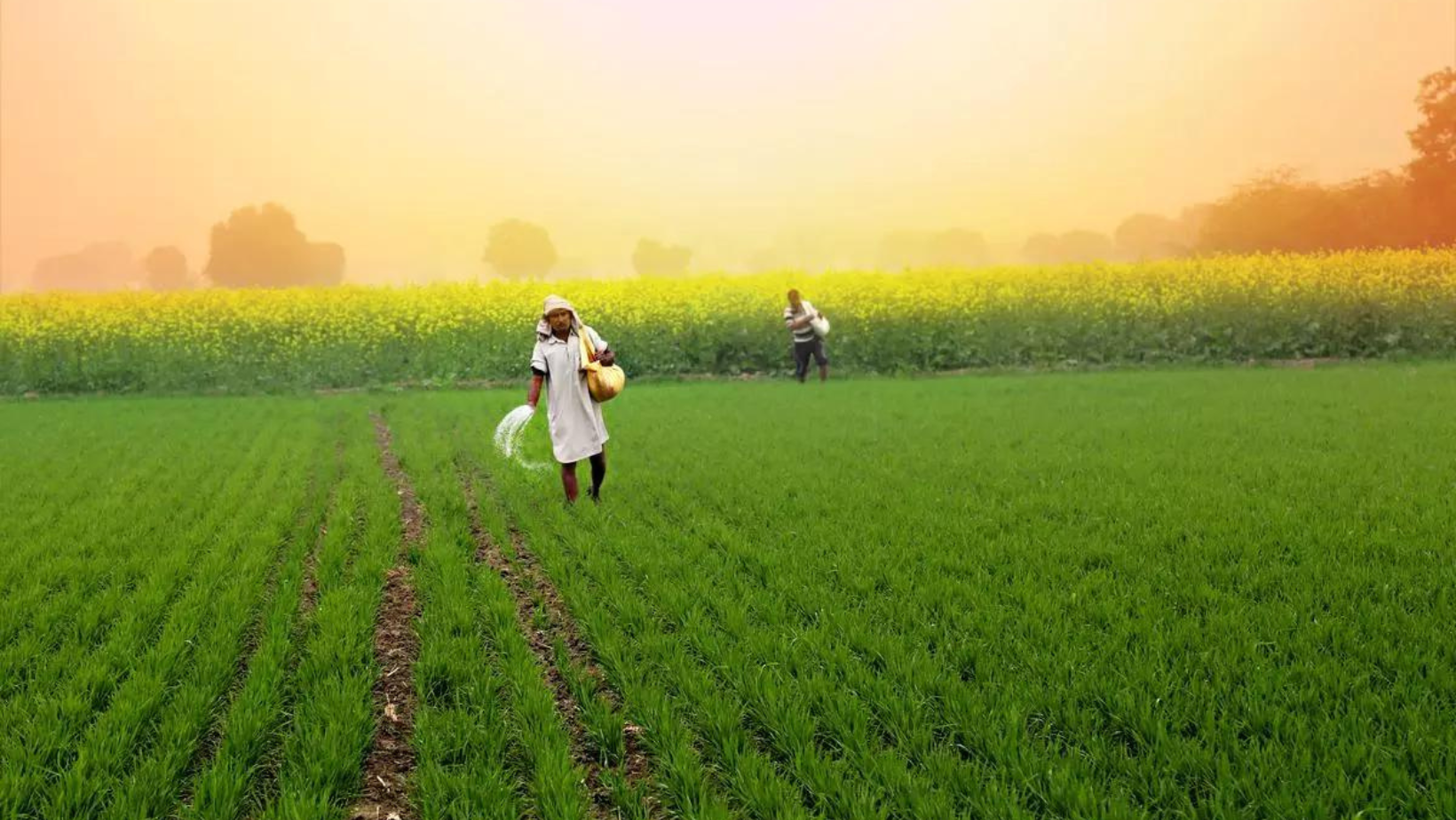
- 30 Jan 2024
Why is it in the News?
The Modi government has brought di-ammonium phosphate (DAP), muriate of potash (MOP) and all other fertilisers that receive nutrient-based subsidy (NBS) support under “reasonable pricing” controls.
What is the Central Government's Decision on Non-Urea Fertilizers?
- The Department of Fertilisers (DoF) under the Ministry of Chemicals & Fertilisers has issued comprehensive guidelines for assessing the fairness of Maximum Retail Prices (MRPs) for all non-urea fertilisers covered by the Nutrient Based Subsidy (NBS) scheme.
- Effective from April 1, 2023, these guidelines set maximum allowable profit margins for different types of fertilizer companies: 8% for importers, 10% for manufacturers, and 12% for integrated manufacturers.
- Companies deemed to be earning excessive profits beyond these thresholds during a financial year (April-March) are required to reimburse the surplus to the DoF by October 10 of the following fiscal year.
- Failure to comply within the specified timeframe will result in the imposition of a 12% per annum interest rate on the refund amount, calculated from the day after the end of the financial year.
- Any unreasonable profits will be deducted from future fertilizer subsidy payments by the government.
How will Companies Unreasonable Profit be Determined?
- Fertilizer companies are required to conduct a self-assessment of unreasonable profits, using cost auditor's reports and audited cost data approved by their board of directors.
- This information must be submitted to the Department of Fertilisers (DoF) by October 10 of the subsequent fiscal year.
- The DoF will then review the reasonableness of Maximum Retail Prices (MRPs) submitted by companies by February 28 for each completed previous financial year.
- Subsequently, it will prepare a report on any unreasonable profits earned and to be recovered from the companies.
Significance of the New DoF Guidelines:
- Non-urea fertilizers are already informally price-controlled, a measure expected to continue until the conclusion of the Lok Sabha elections.
- The new guidelines establish indirect MRP controls on non-urea fertilizers by limiting the profits companies can earn from their sales.
- These limits will be based on the total cost of sales, encompassing production or import costs, administrative overheads, selling and distribution expenses, as well as net interest and financing charges.
- Essentially, the new guidelines extend the detailed cost monitoring and price control regime currently applied to urea to other fertilizers.
What is the Nutrient Based Subsidy (NBS) Scheme?
- NBS fertilisers are technically decontrolled unlike urea, whose maximum retail price (MRP) is fixed by the government.
- Under the NBS scheme, introduced in April 2010, their MRPs are supposed to be market-determined and set by the individual companies selling them.
- The government merely pays a fixed per-tonne subsidy on each of these fertilisers, linked to their nutrient content or specific percentage of nitrogen (N), phosphorous (P), potassium (K) and sulphur (S).
- Unlike the previous system, where subsidies were product-specific, the NBS Scheme encourages balanced fertilization by discouraging excessive use of high-nutrient fertilizers like urea, DAP, and MOP.
- It aims to promote innovation in fertilizer products and encourages the use of complex fertilizers and single super phosphate to address nutrient imbalances.
- However, the scheme faced challenges as urea consumption increased significantly, leading to nutrient imbalances and subsequent failure.
Delhi HC Upholds Validity of Anti-profiteering Provision of CGST Act (TOI)
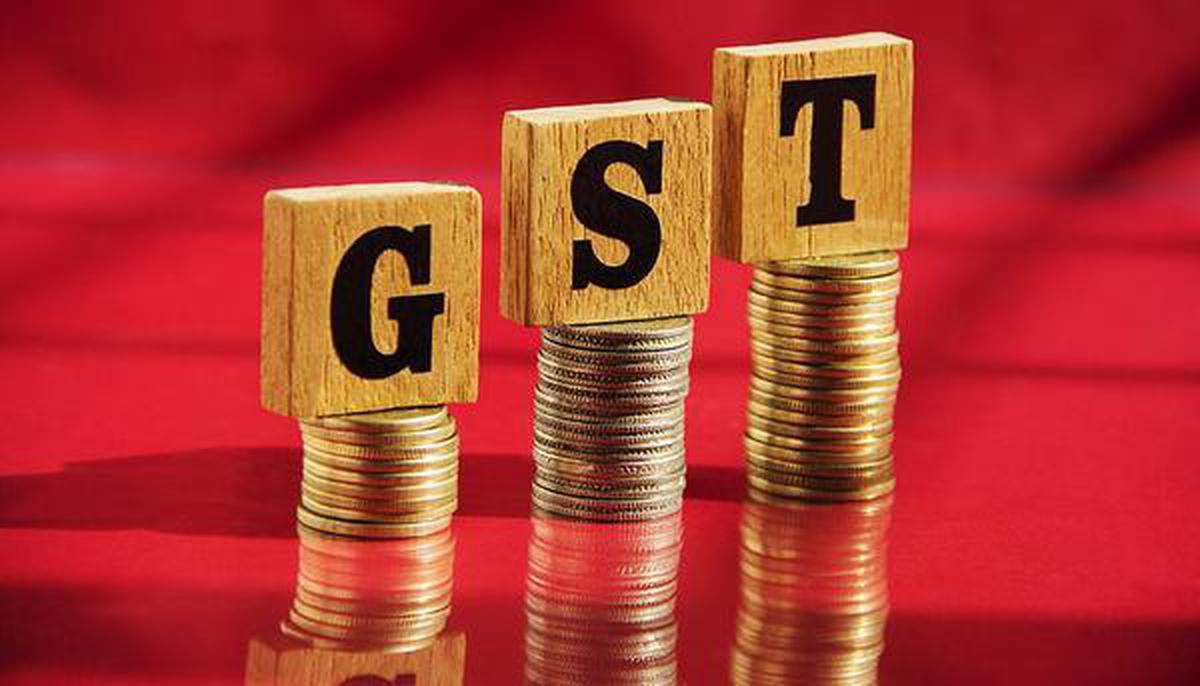
- 30 Jan 2024
Why is it in the News?
Delhi High Court has upheld the constitutional validity of the anti-profiteering clause in the GST law, which mandates companies to pass on the benefit of lower taxes and input tax credits to consumers.
What is an ‘Anti-profiteering’ Activity?
- Any reduction in the rate of GST tax on any supply of goods or services or the benefit of input tax credit should have been passed on to the recipient by way of a commensurate reduction in prices.
- The wilful action of not changing the final price of the good or service by various means, despite the reduction in the rate of the tax for that particular good or service, amounts to “profiteering”.
How is the Anti-profiteering Mechanism Under the CGST Act?
- CGST mandate a 3-tier structure for investigation and adjudication of the complaints regarding profiteering.
- a) National Anti-profiteering
- b) Authority Directorate General of Safeguards
- c) State-level screening committees and standing committee
How Does the Screening Committee and Standing Committee Work?
- GST council may constitute a standing committee, having members from both state and central government.
- Every state shall constitute one state-level screening committee.
- It will have one member from the state government and one member from the central government as nominated by the respective appropriate authority.
- The complaints or issues of local nature will be first examined by the screening committee.
- State-level screening and standing committee will examine the complaint and determine the prime facie evidence to support the validity of the complaint.
- If any committee satisfies that the supplier has contravened section 171 of the CGST Act, the case shall be transferred to DG Safeguards for further investigation.
- The committees shall complete the investigation within a period of a month from the date of the receipt of the application.
What is the Role of DG Safeguards in the Anti-profiteering Mechanism?
- DG safeguards are the main investigation arm in the anti-profiteering mechanism.
- It can summon the interested parties make inquiries or call the relevant documents.
- It can seek help from technical experts in the due course of investigation.
- DG Safeguards shall complete the investigation within a period of three months from the date of receipt of the report from either screening or standing committee.
- The period can be extended for another three months.
Who Can File the Complaint Against Profiteering?
- Any consumer or organisation experiencing a non-reduction in the price of the goods or service despite the reduction in the rate of GST can file a complaint with proper evidence.
- Any supplier, trader, wholesaler or retailer, who could not get the benefit of input tax credit on account of a reduction in the rate of GST, can also file the complaint with proper evidence.
Western Countries Halt UNRWA Funding Amid Gaza War (Indian Express)
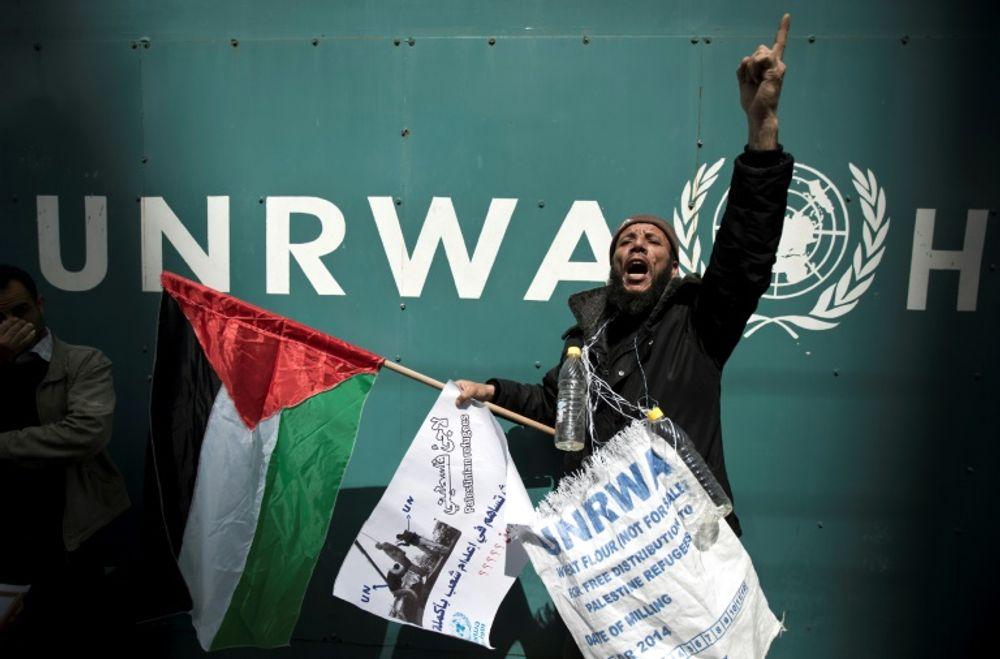
- 30 Jan 2024
Why is it in the News?
UN officials recently urged countries to reconsider their decision to suspend funding for UNRWA, promising strict action against any staff member implicated in Hamas’ October 7 attack on Israel.
Context:
- Recently UN officials urged countries to reconsider their decision to suspend the funding for the United Nations agency for Palestinian refugees (UNRWA).
- The agency highlighted that two million Palestinians in Gaza are dependent on UNRWA services.
- The US and eight other Western countries, which together provided more than half of UNRWA’s 2022 budget, cut the money after Israel accused some of the agency’s staff members of involvement in the October 7 attack.
What is the United Nations Refugee Agency for Palestinians (UNRWA)?
- UNRWA stands for UN Relief and Works Agency for Palestinian Refugees in the Near East.
- It was founded in 1949 to provide aid to about 700,000 Palestinians who were forced to leave their homes in what is now Israel during the 1948 Arab-Israeli war.
- The UN agency operates in Gaza and the Israeli-occupied West Bank, as well as Lebanon, Syria, and Jordan — countries where the refugees took shelter after their expulsion.
- It runs education, health, relief and social services, microfinance and emergency assistance programmes inside and outside refugee camps based in the aforementioned areas.
- Currently, around 5.9 million Palestine refugees — most of them are descendants of original refugees — access the agency’s services.
- Over 1 million are sheltering in UNRWA schools and other facilities in Gaza.
- Funding: UNRWA is funded almost entirely by voluntary contributions by donor states like the US.
- It also gets a limited subsidy from the UN, which is used only for administrative costs, the agency’s website said.
What has Israel accused UNRWA of?
- Israel has alleged that 12 staff members of UNRWA were involved in the October 7 attack.
- It has also claimed that Hamas siphons off funds given to UNRWA and fights from in and around the agency’s facilities.
- Israel has alleged that “Hamas tunnels (are) running next to or under UNRWA facilities and accuses the agency of teaching hatred of Israel in its schools.
How has UNRWA Responded?
- The UNRWA has denied all the allegations, saying it has no links to Hamas.
- In the statement, UN officials said out of 12 staff members who were accused of being involved in the attack, nine have been terminated.
- One is confirmed dead and the identity of the two others is being clarified.
What Happens Now?
- UNRWA is crucial for the survival of people living in Gaza, which has plunged into a humanitarian crisis after the outbreak of the conflict.
- The agency has been the main supplier of food, water and shelter to civilians of the enclave.
- UNRWA, however, would run out of money needed for its aid work within weeks if the funding isn’t restored.
Modified Parbati-Kalisindh- Chambal-ERCP (PKC-ERCP) Link Project (Indian Express)
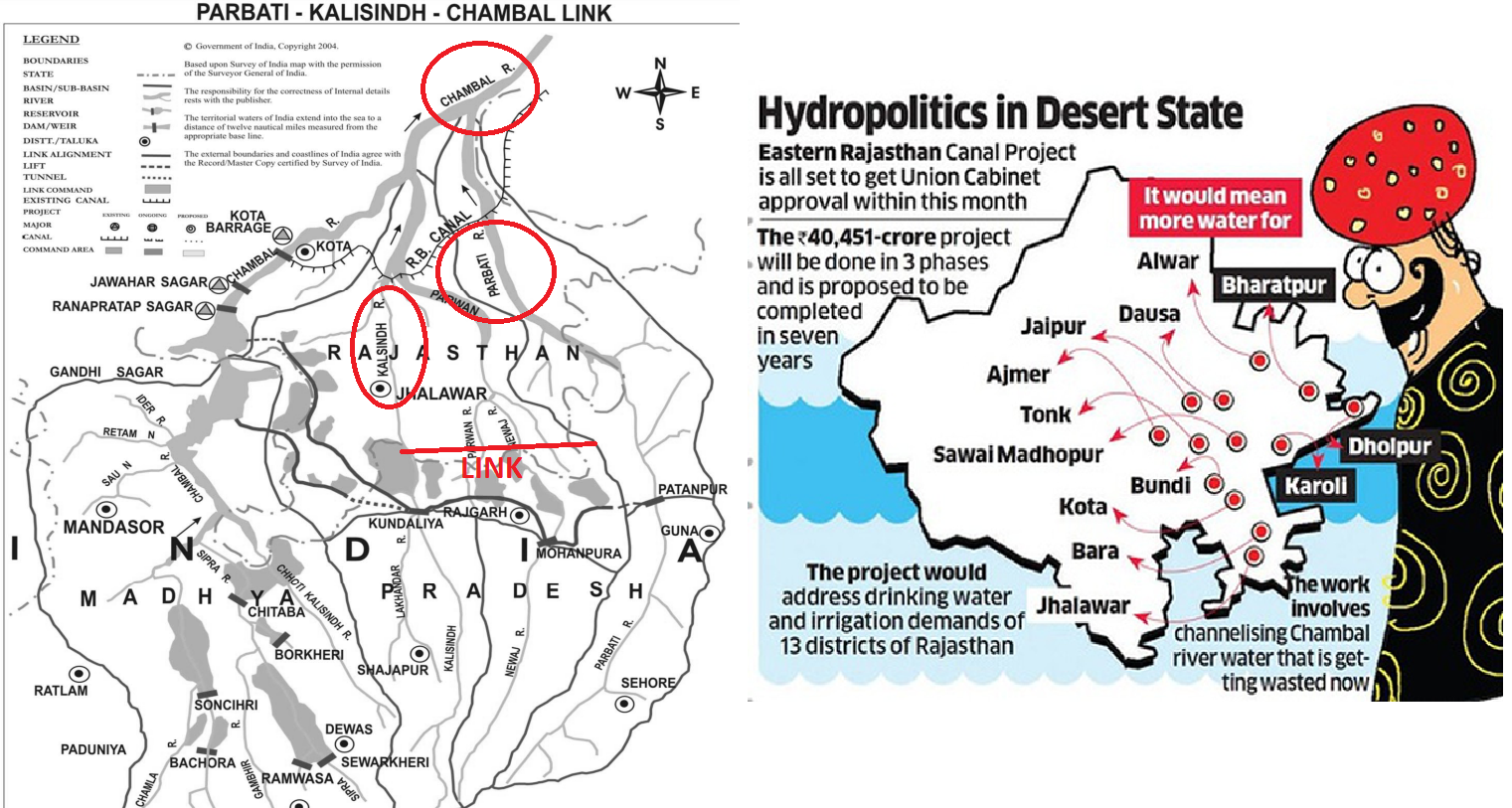
- 29 Jan 2024
Why is it in the News?
An MoU was signed by Rajasthan and MP with the Union Ministry of Jal Shakti Sunday for implementation of the Modified Parbati-Kalisindh-Chambal-ERCP (Modified PKC-ERCP) Link Project.
What is the Modified PKC-ERCP?
- The Modified PKC-ERCP is an inter-state river linking project.
- A Memorandum of Agreement (MoA) will be finalised among Rajasthan, Madhya Pradesh, and the Centre, covering the sharing of water, exchange of water, sharing of costs and benefits, implementation mechanisms, arrangements for management and control of water in the Chambal basin, etc.
What is the PKC link project?
- The Parbati-Kalisindh-Chambal (PKC) link project is one of the 30 links included in the National Perspectives Plan formulated by the erstwhile Union Ministry of Irrigation (now Ministry of Water Resources) and the Central Water Commission in the year 1980.
- As per the National Water Development Agency (NWDA), the preliminary feasibility report of the Kalisindh-Chambal link canal project was prepared and circulated to the states concerned in September 1991.
- The report proposed the diversion of water from river Newaj (a tributary of Kalisindh) and Kalisindh to the river Chambal at either the Rana Pratap Sagar dam or the Gandhi Sagar dam.
- Rajasthan came up with the proposal of the ERCP in 2019, and to utilise water resources optimally, the Task Force for Interlinking of Rivers (TFILR) discussed its merger with the PKC link project.
- This integration was approved by the Special Committee for Interlinking of Rivers in December 2022.
What is the ERCP?
- The Eastern Rajasthan Canal Project (ERCP) is aimed at the intra-basin transfer of water within the Chambal basin, by utilising surplus monsoon water available in the Kalisindh, Parvati, Mej and Chakan subbasins and diverting it into water deficit sub-basins of Banas, Gambhiri, Banganga and Parbati.
- This will provide drinking and industrial water to 13 districts of eastern Rajasthan, namely Alwar, Bharatpur, Dholpur, Karauli, Sawai-Madhopur, Dausa, Jaipur, Ajmer, Tonk, Bundi, Kota, Baran, and Jhalawar.
What are the benefits of the modified project?
- According to the Jal Shakti Ministry, the link project proposes to provide drinking and industrial water in 13 districts of eastern Rajasthan, and Malwa and Chambal regions of Madhya Pradesh, apart from providing irrigation in 2.8 lakh ha. area (or more) each in both states (total of 5.6 lakh ha or more).
What is River Interlinking?
- River Interlinking involves the creation of artificial channels to connect rivers and water bodies, facilitating the transfer of water from regions of surplus to those facing deficits.
- Importance of River Interlinking:
- Disaster Management: River Interlinking plays a crucial role in mitigating floods and droughts, aiding in effective disaster management strategies.
- Economic Benefits: It offers economic advantages such as enhanced irrigation facilities, increased hydro-power generation capacity, and improved inland navigation, contributing to regional development.
- Ecological Restoration: River Interlinking initiatives contribute to the restoration of river ecosystems and provide support to biodiversity in water-deficient regions, fostering ecological balance.
- Concerns Associated with River Interlinking:
- Biodiversity Loss: One major concern revolves around the potential loss of biodiversity resulting from altering natural river courses and habitats.
- Community Displacement: Another significant issue is the displacement of communities residing in areas affected by river interlinking projects, highlighting social and humanitarian challenges.
About the National Perspective Plan:
- The National Perspective Plan was formulated in 1980 under the purview of the Ministry of Irrigation (currently known as the Ministry of Jal Shakti) and the Central Water Commission.
- Objective:
- The plan aims to address regional disparities by facilitating the inter-basin transfer of water resources, thereby minimizing imbalances across different regions of the country.
- Components:
- The plan consists of 30 link projects categorized into two main components:
- the Himalayan component, comprising 14 projects, and
- the Peninsular component, consisting of 16 projects.
- The plan consists of 30 link projects categorized into two main components:
World's First 'Black Tiger Safari', to be Established in Odisha (TOI)
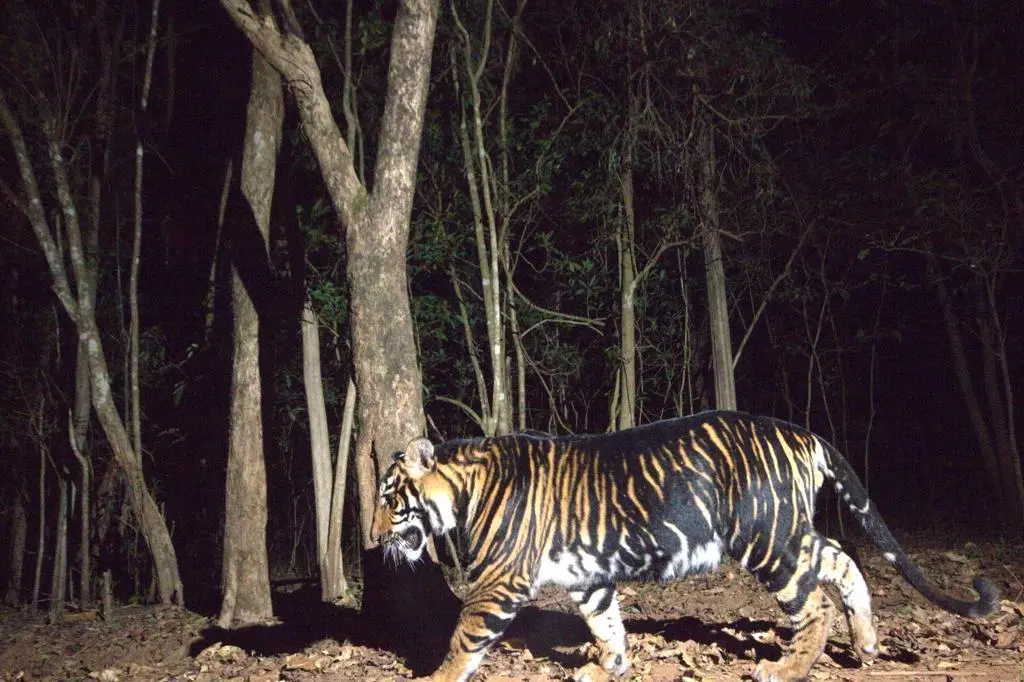
- 29 Jan 2024
Why is it in the News?
Odisha is gearing up to provide an unparalleled experience to visitors through its upcoming black tiger safari, offering a rare glimpse into the lives of these majestic creatures in their natural habitat.
What are Black Tigers or Melanistic Tigers?
- Black tigers, also known as melanistic tigers, are a unique phenomenon resulting from a genetic condition called melanism.
- Melanism causes an increased production of melanin, a pigment responsible for hair, eye, and skin colouration, resulting in black or nearly black skin, feathers, or hair in animals.
- In Simlipal Tiger Reserve, many royal Bengal tigers belong to a distinct lineage characterized by higher-than-normal levels of melanin.
- These tigers exhibit black and yellow interspersed stripes on their coats, though they are not entirely black.
- Therefore, they are more accurately described as pseudo-melanistic.
- As per the 2022 All-India Tiger Estimation, 16 tigers were recorded in Similipal Tiger Reserve, out of which 10 were melanistic.
- However, ongoing tiger surveys conducted by the state government suggest that the actual number of royal Bengal tigers in Similipal Tiger Reserve may be higher than reported by the National Tiger Conservation Authority.
- Factors Contributing to (Pseudo) Melanism:
- Research conducted by the National Centre for Biological Sciences (NCBS) in Bengaluru indicates that a single mutation in the gene Transmembrane Aminopeptidase Q (Taqpep) is responsible for the enlargement or spreading of black stripes into the yellow background of black tigers.
- Genetic analyses and computer simulations suggest that Similipal's black tigers may have originated from a very small founding population of tigers and are likely inbred.
- Additionally, the isolation of tigers in Similipal Tiger Reserve leads to breeding within the population, further contributing to the prevalence of melanism among these tigers.
About Similipal Tiger Reserve (STR):
- Similipal, which derives its name from the ‘Simul’ (Silk Cotton) tree, is a national park and a Tiger Reserve situated in the northern part of Orissa’s Mayurbhanj district.
- It spans an expansive area of 2,750 square kilometres (1,060 square miles), bordering Jharkhand and West Bengal.
- Similipal Tiger Reserve is a key component of the Mayurbhanj Elephant Reserve, which encompasses three protected areas:
- Similipal Tiger Reserve
- Hadagarh Wildlife Sanctuary, and
- Kuldiha Wildlife Sanctuary
- Biodiversity: Similipal is renowned for its rich biodiversity, boasting a diverse array of wildlife including the majestic Bengal tiger, the iconic Asian elephant, the formidable gaur, and the elusive chausingha.
- Recognized as a UNESCO World Network of Biosphere Reserves site since 2009, it stands as Asia's second-largest biosphere reserve, following the Gulf of Kachchh in Gujarat.
- Notably, Similipal Tiger Reserve holds the distinction of being the sole natural habitat in India for melanistic royal Bengal tigers, adding to its ecological significance.
The Procedure of Appointment of a Chief Minister (The Hindu)
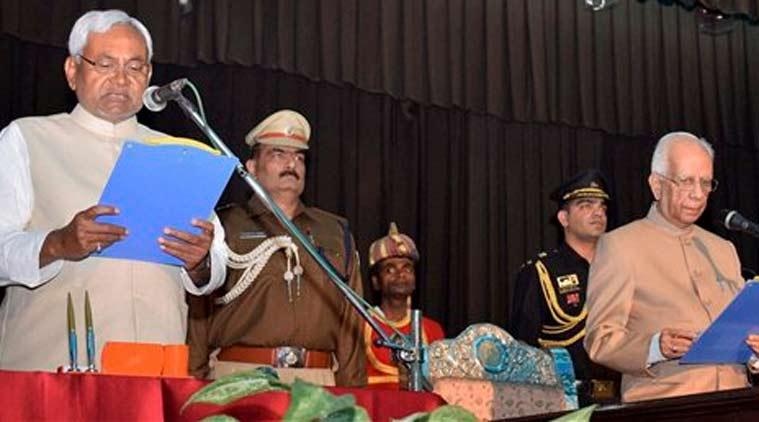
- 29 Jan 2024
Why is it in the News?
Janata Dal (United) president Nitish Kumar took oath as Bihar Chief Minister for a record ninth time on Sunday, returning to the BJP-led National Democratic Alliance just 18 months after he left it, in his fifth switch in political loyalties since 2015.
About Chief Minister:
- According to Article 163 of the Indian Constitution, each state shall have a Council of Ministers led by the Chief Minister (CM) to assist and provide advice to the Governor in carrying out the state's functions.
- In the parliamentary system of governance, the Chief Minister holds the actual executive authority within states.
- While the Governor serves as the ceremonial head of the state, the Chief Minister serves as the head of the government.
- In the Indian political framework, the Chief Minister's role is analogous to that of the Prime Minister at the national level.
Appointment Process of Chief Minister:
- The Constitution of India does not lay down specific criteria for the appointment of a Chief Minister.
- Article 164 of the Indian Constitution stipulates that the Governor is responsible for appointing the Chief Minister, albeit with certain limitations.
- Traditionally, the leader of the largest party in the state legislature is typically chosen as the Chief Minister, following parliamentary conventions.
- Even individuals who are not members of the state legislature (both Houses) can be appointed as Chief Minister for a temporary period of six months, during which they must secure election or nomination (in the case of a bicameral legislature).
- In situations where no single party or pre-poll coalition secures a majority in the assembly (known as a hung assembly), the Governor exercises discretionary powers to appoint the Chief Minister, relying on individual judgment.
- The Constitution does not mandate the Chief Minister-elect to demonstrate majority support in the state assembly before assuming office.
- However, after the formation of the ministry, the Governor may request the Chief Minister to prove majority support within a reasonable timeframe.
Oath and Affirmation of Chief Minister:
- The third Schedule of the Indian Constitution outlines the "Forms of Oaths or Affirmations" to be taken by public officials.
- Typically, the Chief Minister's oath, solemnly administered by the Governor, constitutes a formal commitment to uphold the constitution and execute the responsibilities of the position with integrity and diligence.
Roles and Responsibilities of the Chief Minister:
- The Chief Minister serves as the principal advisor to the Governor on matters pertaining to the convening and adjournment of state legislative sessions.
- As the head of the State Legislative Assembly, the Chief Minister acts as the primary liaison between the Governor and the Council of Ministers.
- The Chief Minister possesses the authority to propose the dissolution of the legislative assembly to the Governor when deemed necessary.
- Additionally, the Chief Minister assumes the role of vice-chairman of the relevant zonal council on a rotational basis, serving a term of one year.
Alabama in USA Carried Out the First Ever Execution Using Nitrogen Gas (Indian Express)
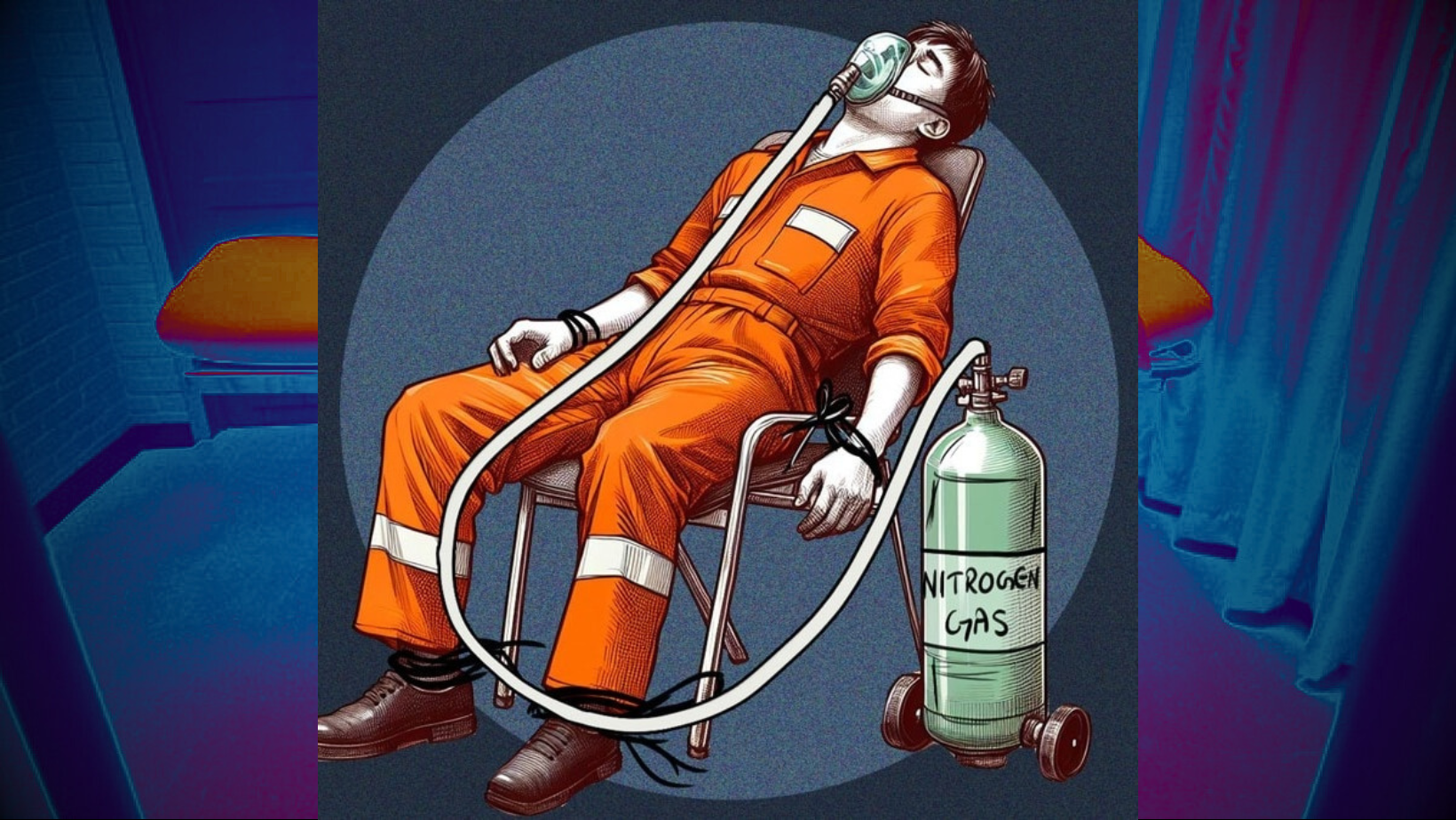
- 29 Jan 2024
Why is it in the News?
Alabama inmate Kenneth Smith was executed on January 25 by nitrogen hypoxia, marking the United States’ first execution using the method, and the first time in over four decades that a new method of execution was introduced since lethal injection was first used in 1982.
News Summary:
- An Alabama death row inmate has been put to death by nitrogen gas, in the first known execution of its kind in the US.
- His case marks the first known execution by nitrogen hypoxia, which his lawyers had argued amounted to a form of “cruel and unusual punishment”.
- Death by nitrogen gas is an untested procedure, and its opponents say it can cause unnecessary suffering.
- Kenneth Smith, 58, was a contract killer who had been on the death row since 1996.
What is Nitrogen Hypoxia?
- Nitrogen hypoxia is a style of execution wherein an inmate is made to inhale nitrogen instead of oxygen, leading to gradual asphyxiation.
- To achieve this, a respirator mask is placed over the head of the inmate on death row.
- While the air we breathe is made up of 80 per cent nitrogen, it exists in combination with oxygen, rendering the colourless, odourless gas harmless.
- However, if a person is deprived of oxygen and made to breathe in just nitrogen, the gas proves lethal.
- When a high concentration of nitrogen is inhaled, it replaces the oxygen in the body and disables the respiratory system, causing death.
Why Nitrogen Hypoxia?
- Nitrogen hypoxia is the first new method of execution to be introduced since 1982 when lethal injections began being used.
- The drug needed to administer lethal injections to inmates on death row became harder to access over time, pushing authorities to scout for alternatives.
- Further, there were reports of a surge in complications associated with the procedure as well.
- As of now, only three states in the United States have approved the use of nitrogen gas to execute death row inmates, namely, Alabama, Oklahoma, and Mississippi.
Is Nitrogen Hypoxia Ethical?
- There is little research regarding death by nitrogen hypoxia.
- When the State is considering using a novel form of execution that has never been attempted anywhere, the public has an interest in ensuring the State has researched the method adequately and established procedures to minimise the pain and suffering of the condemned person.
- The risks associated with this method of execution include the risks surrounding the chances of a gas leak if the mask is not secured well on the inmate.
- The law requires that this execution not be cruel.
Key facts about Nitrogen:
- The air around us, the atmosphere, is made up of about 78% nitrogen and only 21% oxygen.
- The rest comprises water vapour, argon, neon, helium, hydrogen and xenon.
- Those are known as "permanent gases".
- There is also a range of "variable gases" in the atmosphere.
- They include methane, ozone and carbon dioxide — with concentrations that can vary from day to day and region to region.
- At a concentration of 78% in the atmosphere, nitrogen is safe to breathe.
- But it grows dangerous and potentially fatal once levels of nitrogen reach 80% or more.
- Nitrogen has no odour, is tasteless, and colourless.
- Nitrogen gas is inert, but certain soil bacteria can "fix" nitrogen into a usable form for plants and animals.
- French chemist Antoine Laurent Lavoisier named nitrogen azote, meaning without life.
- Nitrogen was sometimes referred to as 'burnt' or 'dephlogisticated' air.
- Nitrogen compounds are found in foods, fertilizers, poisons, and explosives.
- It is responsible for the orange-red, blue-green, blue-violet, and deep violet colours of the aurora.
- Nitrogen has a valence of 3 or 5.
- Discovery: Scottish physician Daniel Rutherford in 1772
- Nitrogen is the fifth most abundant element in the universe.
AISHE report shows higher enrollment of women in higher education for 8 consecutive years (Indian Express)

- 27 Jan 2024
Why is it in the News?
In the last eight years, more women have enrolled in higher education compared to men, according to the 2021-22 All India Survey on Higher Education (AISHE) released recently.
Major Highlights of the AISHE Report 2021-22:
- The All India Survey on Higher Education (AISHE) for 2021–2022 has recently been released, and it highlights a notable change in enrolment trends.
- Women have enrolled in higher education at a higher rate than men during the last eight years, which is a significant step toward gender parity in academic fields.
Women Lead the Surge:
- According to the AISHE report, women now constitute 55 percent of the total increase in higher education enrollment, accounting for a staggering 91 lakh individuals since the academic year 2014-15.
- The latest statistics indicate that out of the overall enrollment of 4.33 crore, 48 percent, or 2.07 crore, are women—a marginal uptick from the 2.01 crore recorded in the previous academic year.
- The trend, characterized by a continuous surge in female enrollment since 2014-15, is particularly noteworthy.
- The report highlights an 18.7 percent increase in the enrollment of women from 2017-18 to 2021-22, showcasing a consistent upward trajectory.
Narrowing the Gender Gap:
- The gender gap in higher education is steadily narrowing, with the science stream standing out as a domain where women are making significant strides.
- Notably, 52.1 percent of the 57.18 lakh students enrolled in science at the undergraduate, postgraduate, MPhil, and PhD levels are women.
- The undergraduate level alone witnesses 51 percent of women in the science stream.
- However, disparities persist in certain disciplines, such as engineering and technology, where female enrollment lags significantly behind.
- The AISHE survey reveals that of the total students in undergraduate engineering programs, only 11.3 lakh are females, while 27.6 lakh are males.
- In addition to undergraduate programs, the report sheds light on postgraduate and PhD levels, showcasing a remarkable 61.2 percent of women in postgraduate science programs and a significant 62 percent representation in PhD programs in the sciences.
- State-wise Enrolment: The top 6 states in terms of student enrollment are Uttar Pradesh, Maharashtra, Tamil Nadu, Madhya Pradesh, West Bengal, and Rajasthan, constituting 53.3% of total enrollment.
- Number of Foreign Students: There are 46,878 foreign students enrolled in higher education, with the highest share from Nepal (28%).
- Teaching Staff in Higher Education: The total number of faculty/teachers in 2021-22 is 15.98 lakh, with about 56.6% male and 43.4% female, showing an increase of 46,618 teachers over 2020-21.
- This emerging trend is not only indicative of changing societal dynamics but also underlines the need for continued efforts to foster inclusivity and equal opportunities within the realm of higher education.
- The report serves as a testament to the progress made while emphasizing the areas that still require attention and intervention.
About the All India Survey on Higher Education (AISHE) Report:
- The All India Survey on Higher Education serves as the primary source of comprehensive data regarding the state of higher education in India.
- Published by the Ministry of Education, this survey has been ongoing since 2011, covering all higher educational institutions across the country.
- It gathers detailed information on various aspects including student enrollment, faculty data, infrastructure, and finances.
- The report relies on voluntary data submission by higher education institutions listed on the aishe.gov.in portal, with the accuracy of the data overseen by the respective institution's Nodal Officers.
What are incestuous ‘sapinda’ marriages, and why has the Delhi High Court reaffirmed the ban on them? (Indian Express)

- 27 Jan 2024
Why is it in the News?
Delhi High Court this week rejected a challenge to the constitutionality of Section 5(v) of the Hindu Marriage Act, 1955 (HMA), which prohibits marriage between two Hindus if they are “sapindas” of each other — “unless the custom or usage governing each of them permits of a marriage between the two”.
What was the Case?
- In 2007, the marriage of a woman was declared void after her husband proved it was a sapinda marriage and she did not come from a community where such marriages were customary.
- This decision was challenged in the Delhi High Court, which dismissed the appeal in October 2023.
- The woman then petitioned the High Court again, challenging the legality of the sapinda marriage ban.
- She claimed that sapinda marriages take place even when there is no evidence of custom.
- As a result, Section 5(v), which prohibits sapinda marriages unless an established custom exists, violates the right to equality guaranteed by Article 14 of the Constitution.
- The petitioner also claimed the marriage had received the consent of both families, demonstrating its legitimacy.
What are Sapinda Marriages?
- A sapinda marriage is one between two people who are related to each other to some extent.
- According to Section 3(f)(ii), “Two persons are said to be sapindas of each other if one is a lineal ascendant of the other within the limits of sapinda relationship, or if they have a common lineal ascendant who is within the limits of sapinda relationship with reference to each of them.”
- According to the Hindu Marriage Act (HMA), on the mother's side, a Hindu person cannot marry anyone within three generations of them in the "line of ascent".
- On the father's side, this prohibition applies to anyone within five generations of the individual.
- This means that on their mother's side, a person cannot marry their sibling (first generation), parents (second generation), grandparents (third generation), or anyone else who shares this ancestry within the three generations.
- On their father's side, this prohibition would apply to their grandparents' grandparents as well as anyone within five generations of this ancestry.
Exceptions to the Prohibition Against Sapinda Marriages?
- The only exception can be found within the same provision.
- An exception arises when the customs of the individuals involved permit sapinda marriages.
- The term "custom" is defined in Section 3(a) of the HMA.
- According to this section, a custom must have been consistently and uniformly practised for an extended period and must have gained sufficient recognition among Hindus in a specific locality, community, or family to be deemed legally binding.
Are Marriages Similar to Sapinda Marriages Allowed in Other Countries?
- In several European countries, the laws on relationships that are considered incestuous are less stringent than in India.
- In France, the crime of incest was abolished under the Penal Code of 1810, so long as the marriage was between consenting adults.
- Portuguese law also does not criminalise incest.
- Under Italian law, incest is a crime only if it causes a “public scandal”.
- In the United States, incestuous marriages are banned in all 50 states, though incestuous relationships between consenting adults are allowed in New Jersey and Rhode Island.
CSIR’s Republic Day Tableau highlights the Purple Revolution through Lavender Cultivation in Jammu & Kashmir (PIB)
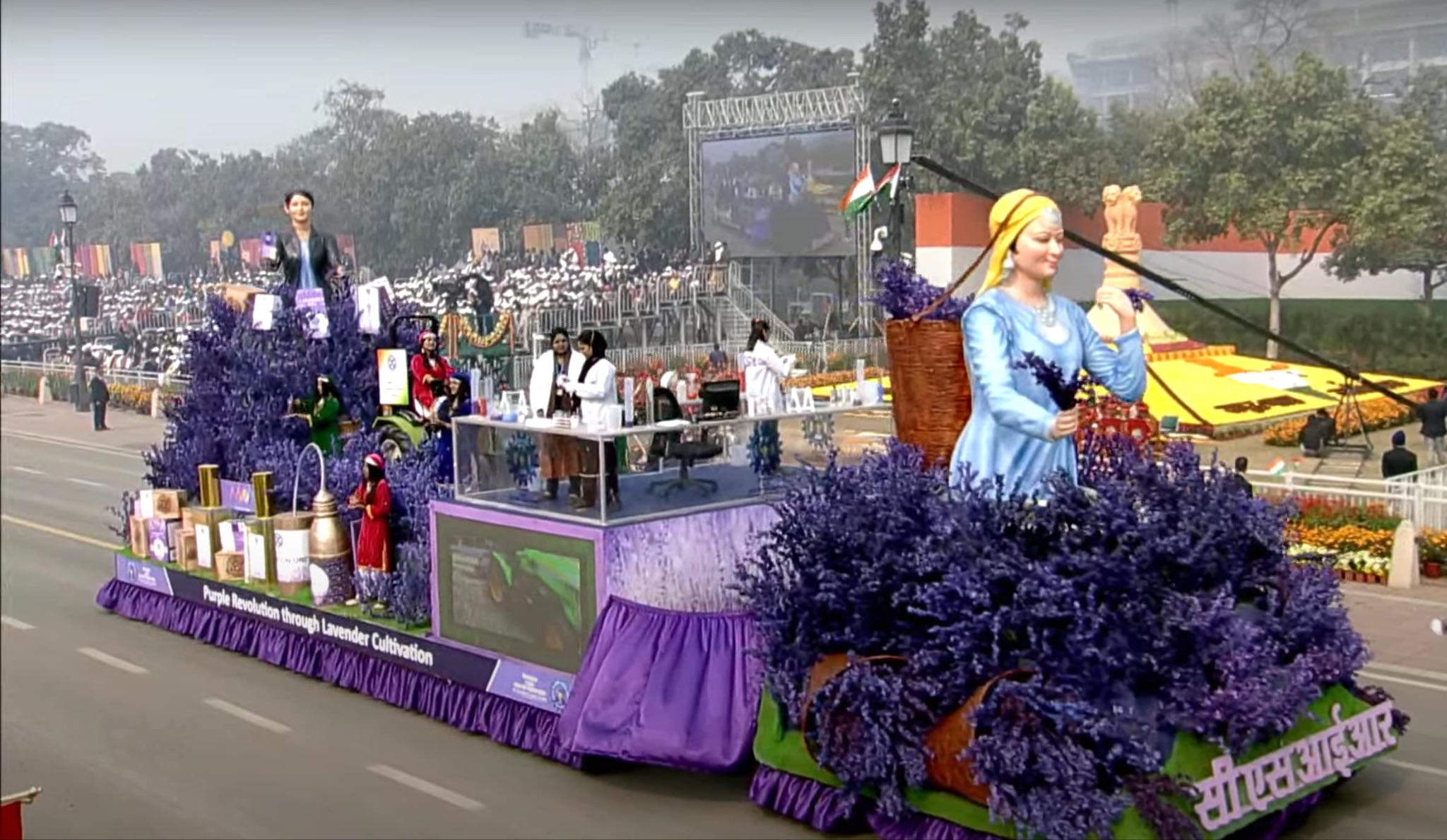
- 27 Jan 2024
Why is it in the News?
The Council of Scientific & Industrial Research's Republic Day Tableau highlighted the unleashing of a Purple Revolution ushered through Lavender cultivation in Jammu & Kashmir.
What is the Purple Revolution?
- The Purple Revolution or Lavender Revolution, launched by the Ministry of Science & Technology, aims to promote the indigenous aromatic crop-based agro-economy through the ‘aroma mission’ of the Council of Scientific and Industrial Research (CSIR).
- The mission aims to increase the income of the farmers and promote lavender cultivation on a commercial scale.
- Lavender oil, which sells for, at least, Rs. 10,000 per litre, is the main commodity.
- Other popular products include medicines, incense sticks, soaps, and air fresheners.
- The cultivation of lavender is very cost-effective as it yields revenue immediately.
- Jammu and Kashmir’s climatic conditions are conducive to lavender cultivation since the aromatic plant can withstand both chilly winters and pleasant summers.
- Additionally, it is a low-maintenance crop, which can be used from its second year of plantation and blossoms for fifteen years.
- In its entirety, lavender production gives better returns when compared to other traditional crops.
- Under the One District One Product-Districts as Export Hubs (ODOP-DEH) initiative, lavender cultivation in Jammu and Kashmir has experienced a significant boom.
- Lavender has been designated by the central government as a "Doda brand product" to promote the rare aromatic plant and boost the morale of farmers, entrepreneurs, and agribusinesses involved in its cultivation as part of this Aroma Mission.
- The Aroma Mission through the Purple Revolution aims to bring about a revolutionary change in the fragrance industry, consequently promoting the expansion of the aroma sector and generating rural employment, through targeted interventions during cultivation, product refinement, market development and curating an expansion strategy for the lavender crop.
About Aroma Mission:
- The Aroma Mission, launched in 2016, aims to enhance the cultivation of plants like lavender, Aloe Vera, Mehndi, Menthol, and Mint, known for their aromatic and medicinal properties.
- Developed by the Council of Scientific & Industrial Research (CSIR), this mission employs new technologies.
- It seeks to revolutionize the aroma sector by improving agricultural practices, processing methods, and product development.
- Additionally, it provides technical and infrastructure support to farmers and growers nationwide, ensuring fair prices through buy-back mechanisms.
- The mission targets to expand cultivation by 30,000 hectares and catalyze aromatic crop cultivation in 60,000 hectares overall.
- This expansion is expected to yield an extra 700 tonnes of essential oils used in perfumery, cosmetics, and pharmaceuticals, creating a business worth at least 200 crores.
Interim Budget 2024: Exporters seek higher allocation for MAI scheme (Business Standard)
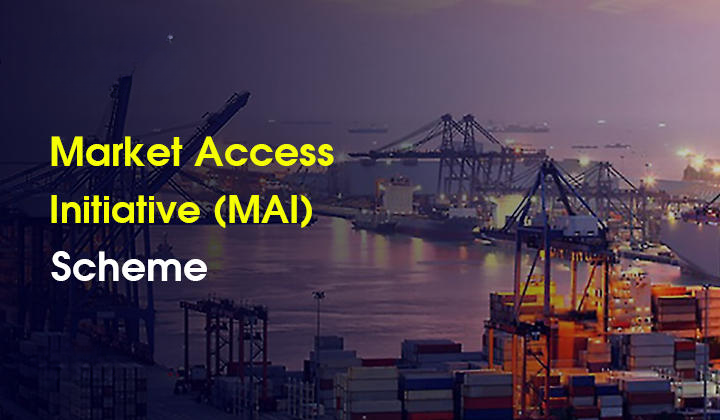
- 27 Jan 2024
Why is it in the News?
Ahead of the interim Budget 2024, exporters have urged the government to allocate funds worth $3.88 billion for the Market Access Initiative (MAI) scheme to promote Indian exports and help them hit the ambitious $2 trillion target by 2030.
What is the Market Access Initiatives (MAI) Scheme?
- The Market Access Initiative (MAI) Scheme is an Export Promotion Scheme envisaged to act as a catalyst to promote India’s exports on a sustained basis.
- The scheme is formulated on a focus product-focus country approach to evolve specific markets and specific products through market studies/surveys.
- Assistance would be provided to Export Promotion Organizations/Trade Promotion Organizations/National Level Institutions/ Research Institutions/Universities/Laboratories, Exporters etc., for enhancement of exports through accessing new markets or through increasing the share in the existing markets.
- Under the Scheme, the level of assistance for each eligible activity has been fixed.
- The following activities will be eligible for financial assistance under the Scheme:
- Marketing Projects Abroad
- Capacity Building
- Support for Statutory Compliances
- Studies
- Project Development
- Developing Foreign Trade Facilitation Web Portal
- To support Cottage and handicraft units
How does the MAI Scheme work?
- The scheme’s primary goal is to facilitate export growth by enabling entities to enter new markets or enhance their presence in existing markets.
- To accomplish this, the scheme provides predetermined levels of assistance for each eligible activity.
- By directing attention to key products and specific markets, the MAI Scheme serves as a catalyst for driving India’s export expansion in a sustainable and strategic manner.
Who is eligible to receive assistance under the MAI Scheme?
- Various entities are eligible to receive financial assistance under the MAI Scheme, including:
- Export promotion organizations
- Trade promotion organizations
- National level institutions
- Research institutions
- Universities
- Laboratories
- Individual exporters
- Start-ups
Who administers the MAI Scheme?
- The MAI Scheme is administered by the Ministry of Commerce and Industry, Government of India, through the Directorate General of Foreign Trade (DGFT).
Rare Golden Tiger takes a stroll in Assam’s Kaziranga National Park, video stuns people (HT)

- 27 Jan 2024
Why is it in the News?
A rare golden tiger was recently spotted in Kaziranga National Park taking a stroll and is the only known golden big cat in India.
What is a Golden Tiger?
- A Golden Tiger, also called a Golden Tabby Tiger, is a Bengal tiger with a unique colour variation caused by a recessive gene.
- The tiger looks golden because it has a mutation or a genetic variant.
- Basically, tigers have three colours: black, orange and white.
- In the Golden Tiger, the black colour is missing and it is slightly faded.
- The golden colouring of these tigers comes from a recessive trait called 'wideband,' affecting how black pigments are produced during hair growth.
- Golden tigers are not a distinct subspecies but rather a product of genetic diversity among Bengal tigers.
- They are extremely rare in the wild and even more so in captivity.
About Kaziranga National Park:
- Kaziranga National Park lies partly in the Golaghat District and partly in the Nagaon District of Assam.
- It is the oldest park in Assam and covers an area of 430 sq km along the river Brahmaputra on the North and the Karbi Anglong hills on the South.
- The National Highway 37 passes through the park area and tea estates, hemmed by table-top tea bushes.
- Kaziranga National Park a world heritage site is famous for the Great Indian one-horned rhinoceros, the landscape of Kaziranga is of sheer forest, tall elephant grass, rugged reeds, marshes & shallow pools.
- It was declared a National Park in 1974.
- It is one of the last areas in eastern India undisturbed by a human presence.
- It is inhabited by the world's largest population of one-horned rhinoceroses, as well as many mammals, including tigers, elephants, panthers and bears, and thousands of birds.
- Vegetation: Due to the difference in altitude between the eastern and western areas of the park, mainly four main types of vegetation’ like alluvial inundated grasslands, alluvial savanna woodlands, tropical moist mixed deciduous forests, and tropical semi-evergreen forests.
- Flora: Kumbhi, Indian gooseberry, cotton tree, and elephant Apple are among the famous trees that can be seen in the park.
- Fauna: The forest region of Kaziranga Park is home to the world’s largest population of Indian Rhinoceros.
- Other animals that can be seen in the elephant grass, marshland and dense tropical moist broadleaf forests of Kaziranga are Hoolock Gibbon, Tiger, Leopard, Indian Elephant, Sloth Bear, Wild water buffalo, swamp deer, etc.
- Also in this park the good number of migratory bird species from Central Asia.
- With the increase in tiger population every year, the government authorities declared Kaziranga a Tiger Reserve in the year 2006.
As Army launches Op Sarvashakti, recalling Sarpvinash of 2003, that crushed terror base in Pir Panjal (Indian Express)
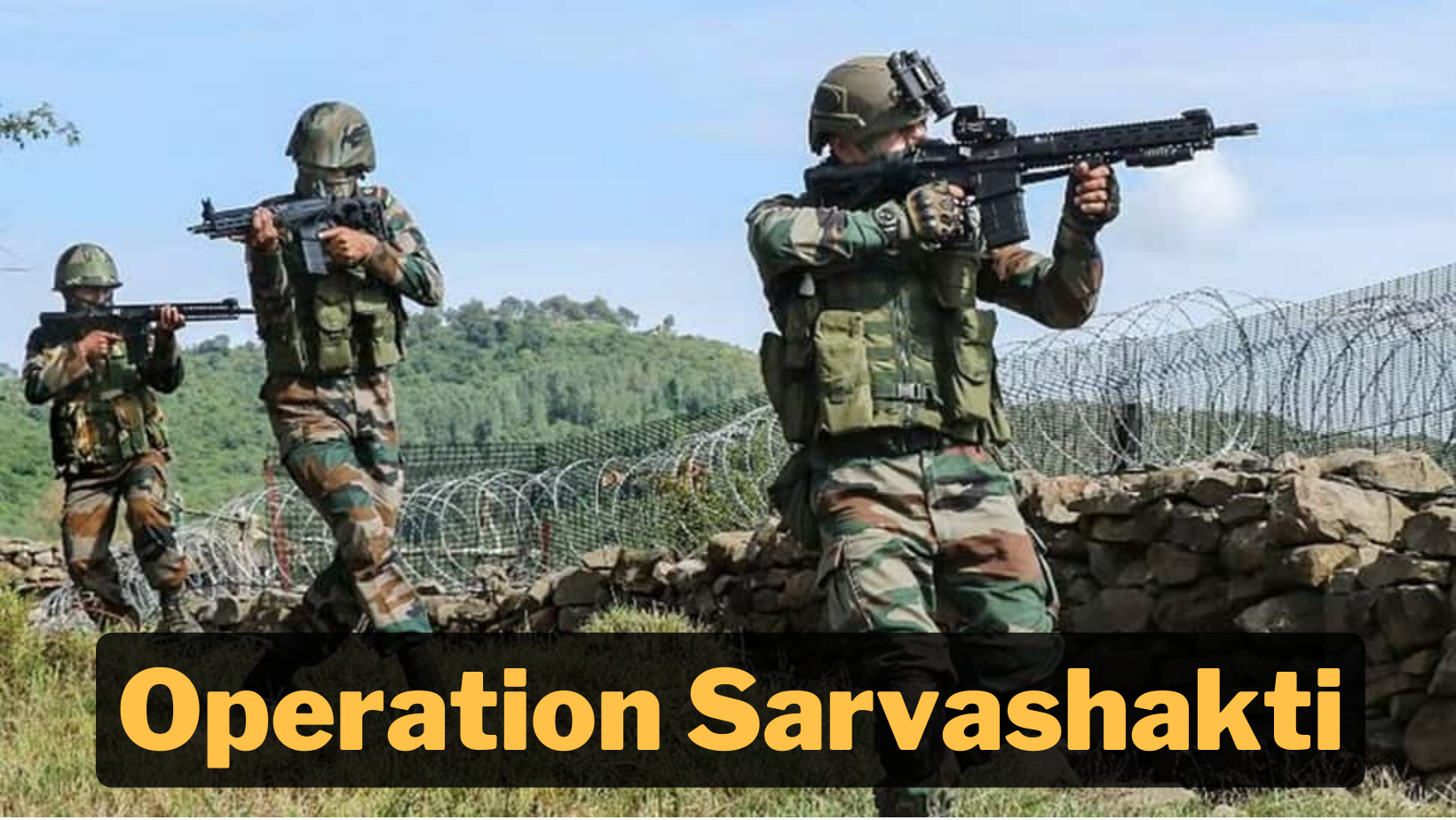
- 25 Jan 2024
Why is it in the News?
The Army has launched Operation Sarvashakti in the Rajouri-Poonch sector of Jammu and Kashmir, deploying forces on both sides of the Pir Panjal range to target terrorists who have carried out a series of attacks on troops in the area.
What is Operation Sarvashakti?
- In a bid to combat increasing terrorist activities in Jammu and Kashmir, the Army has initiated Operation Sarvashakti, under which terrorists operating on both sides of the Pir Panjal mountain ranges in the Union Territory will be neutralised.
- There were three major attacks on the security forces in 2023, and over the past few years, 20 soldiers have been killed in terrorist ambushes in this area.
- Operation Sarvashakti, as part of which at least three brigades of additional troops are being deployed in the sector from various reserve and strike corps formations in order to increase the density of troops and, therefore, the likelihood of contact with terrorists, recalls an earlier operation by the Army in the same forests more than two decades ago.
- Back in 2003, Indian forces launched Operation Sarpvinash to flush out terrorists who had infiltrated from across the border and set up camps in the thick forests south of the Pir Panjal range, especially in the Hilkaka area in Poonch.
What was Operation Sarpvinash?
- Operation Sarpvinash, launched in April 2003, marked a significant counter-insurgency effort in Jammu and Kashmir.
- In response to intelligence indicating over 300 foreign terrorists establishing secure camps in Surankote and Hilkaka post-infiltration across the Line of Control (LoC), the three-month-long operation involved 10,000 troops in a challenging 150 sq km area.
- Employing helicopters and ground forces, the operation neutralized approximately 100 terrorists, dismantled bunkers, and recovered weapons, explosives, and supplies.
- Operation Sarpvinash successfully restored peace to the region until 2017-18, impacting the region's security dynamics.
- However, since 2021, there has been a resurgence of high-intensity attacks on security forces in this area.
Why is this area important strategically?
- The areas south of Mendhar leading to the Pir Panjal range through Hilkaka constitute among the shortest routes of access for infiltrators from across the LoC into the Kashmir valley.
- The terrorists chose this region to set up camps because dominating this area can potentially provide a conduit to personnel in the event of a military operation by the Pakistanis, and easier infiltration of terrorists.
- The dense forests and steep mountain slopes offer both adequate cover and visual domination of the area.
- Terrorists were able to merge with the foliage whenever Indian troops carried out searches in the area and inflicted casualties in case of contact.
- All of these locational advantages for terrorists remain intact to some degree even now.
Centre approves incentive of Rs 8,500 crore for coal gasification projects (Indian Express)
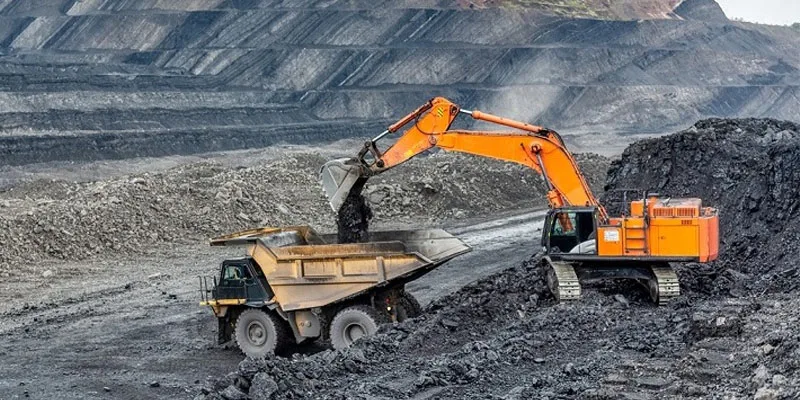
- 25 Jan 2024
Why is it in the News?
In a bid to achieve the target of coal gasification of 100 million tonnes (MT) of coal by 2023 in India, the government recently approved Rs 8,500 crore incentives.
What is Coal Gasification?
- Coal gasification is a thermo-chemical procedure wherein the pressure and heat of the gasifier disintegrate coal into its chemical components.
- The resulting "syngas" are mostly carbon monoxide (CO) and hydrogen, with some other gaseous substances thrown in for good measure.
- Coal gasification is an in-situ method wherein oxygen is infused into the seam together with water and ignited at high temperatures, causing coal to partly oxidised into hydrogen, CO, carbon dioxide (CO2), methane (CH4), and hydrogen sulphide (H2S).
- Ex-situ reactors are designed to simulate the gasification process above the ground's surface.
- Sulphur in coal is transformed to H2S and trace volumes of carbonyl sulphide during the gasification process (COS).
- Acid gas removal technology can easily and cost-effectively discard these sulphur compounds.
- There is no scrubber sludge produced by coal gasification plants, which necessitates careful and expensive disposal.
- The majority of the wash water is reprocessed, and residual wastewater from gasification plants can be treated effectively.
- As a result, coal gasification is regarded as a cleaner coal technology when compared to coal combustion.
- Furthermore, coal could be used to generate a range of products using clean coal innovations such as hydrogen, methanol, and fertilisers via coal gasification.
- Carbon fibres and plastic composites made from coal power plant ash/residue.
How can it be used?
- Syngas, according to proponents of coal gasification, can be used to generate power, in energy-efficient fuel cell technology, or as chemical "building components" for industrial applications.
- The hydrogen can also be extracted and used to power a hydrogen economy.
- Coal gas can also be transformed into a transportation fuel to be used in automobiles as a replacement for gasoline, but it is less efficient than the current output and combustion of petroleum-based gasoline.
- Coal gasification is said to be more efficient than traditional coal burning since it can use the gases two times: the coal gases are first purified of contaminants before being fired inside a turbine to produce energy.
- The gas turbine exhaust heat can be then collected and used to produce steam for a steam turbine generator.
- This is known as a combined process, and according to DOE, a coal gasification processing facility using this dual method can possibly attain an efficiency of 50% or higher, compared to the customary coal power plant, which is typically just above 30%.
Significance of Coal Gasification:
- India announced environmental targets as its Nationally Determined Contribution (NDC) under the Paris Agreement in 2016.
- In order to meet these objectives, coal gasification aids in the decrease of emission levels and the advancement of non-fossil fuel-based energy resources.
- The syngas produced by coal gasification can be used to generate urea and a variety of products such as methanol, Dimethyl ether (DME), and olefins, allowing India to minimise imports and become self-sufficient.
- Syngas CO and H2 are essential reducing agents for steel production and are regarded as an environmentally friendly technique of steel production because they reduce the import of furnace oil.
- India has ambitious plans to produce active pharmaceutical ingredients (API) domestically rather than importing them from China.
- As a result, the potential of Syngas requirement for making APIs, as well as methanol as a solvent, is being investigated.
- The synthesis gas can be used in an Integrated Gasification Combined Cycle (IGCC) system to generate electricity in an efficient and environmentally friendly manner.
Initiatives taken by India:
- The Ministry of Coal, through Atmanirbhar Bharat Abhiyaan, has taken the initiative, National Coal Gasification Mission, that is to utilise coal through coal gasification, with the goal of achieving 100 MT coal gasification by 2030.
- It has also been recommended that all coal companies assign a nodal officer and formulate a plan for gasifying at least 10 per cent of their coal production.
- SHAKTI policy was implemented in coal gasification projects to minimise operating costs by allocating long-term coal linkages through auction.
What is National Voters’ Day?: Govt plans events around theme for 2024 (Indian Express)
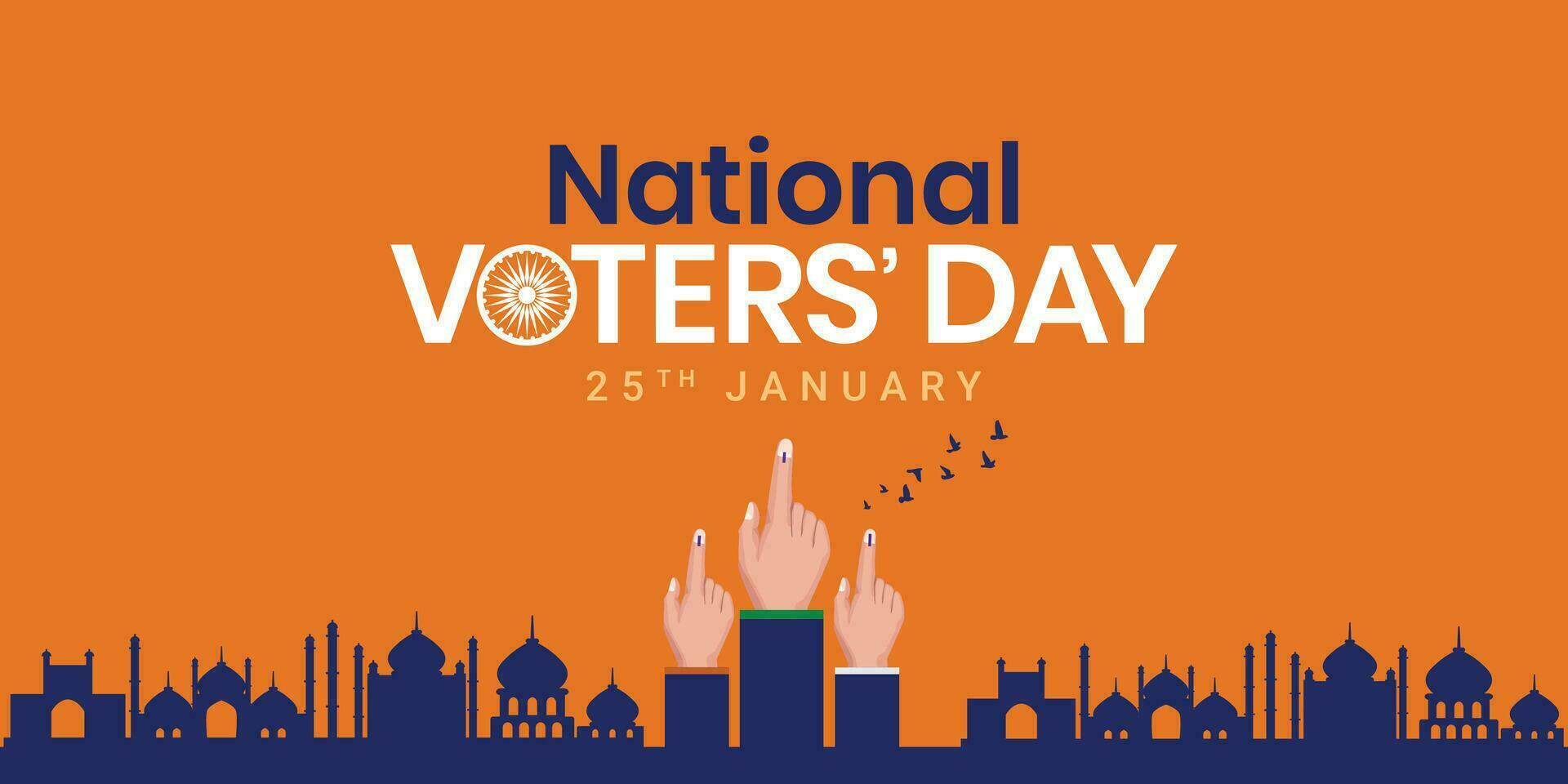
- 25 Jan 2024
Why is it in the News?
India today is celebrating its 14th National Voters’ Day. It is celebrated annually on January 25 since 2011 to mark the foundation day of the Election Commission of India. The ECI was founded on January 25, 1950.
Why is National Voters’ Day celebrated?
- National Voters’ Day aims to promote people’s participation in elections by encouraging and felicitating young voters and increasing voter enrolment.
- It is also utilised to spread awareness among voters and to promote informed participation in the electoral process.
- The day is celebrated at the national, state, district, constituency and polling booth levels, which makes it one of the largest celebrations in the country.
- The date chosen for National Voters' Day commemorates the formation of the Election Commission of India (ECI) on January 25, 1950.
- The ECI is an autonomous constitutional body under Article 324 entrusted with the sacred responsibility of conducting free, fair, and credible elections across the country.
- Since its inception, the ECI has played a pivotal role in upholding the democratic principles of India, ensuring the voice of every citizen is heard.
- The first National Voters’ Day was celebrated in 2011 under the leadership of the then Chief Election Commissioner (CEC) S Y Quraishi.
- Emulating India’s example, six countries, including Sri Lanka, Pakistan, Nepal and Bhutan, have started celebrating National Voters Day.
- National Voters’ Day pledge: As a part of the celebrations, all government offices, autonomous bodies, and organisations take a pledge on the day.
- Schools and educational Institutions across the country are encouraged to conduct activities such as debates, discussions, and competitions on the theme of Voters’ Day.
What is the theme for National Voters’ Day 2024?
- The theme for this year is ‘Nothing Like Voting, I Vote For Sure’, which is a continuation of last year’s theme, and conveys an individual’s feeling and aspiration towards participation in the electoral process through the power of their vote.
- The logo for this year’s theme is designed in such a way that it showcases the festivity and inclusivity of the electoral process.
- The Ashoka Chakra in the background represents the largest democracy in the world, whereas the inked finger represents the participation of each and every voter of the country.
- The tick mark in the logo stands for informed decision-making by the voter.
NFRA to inspect Big 4, others in 2024 too (Financial Express)
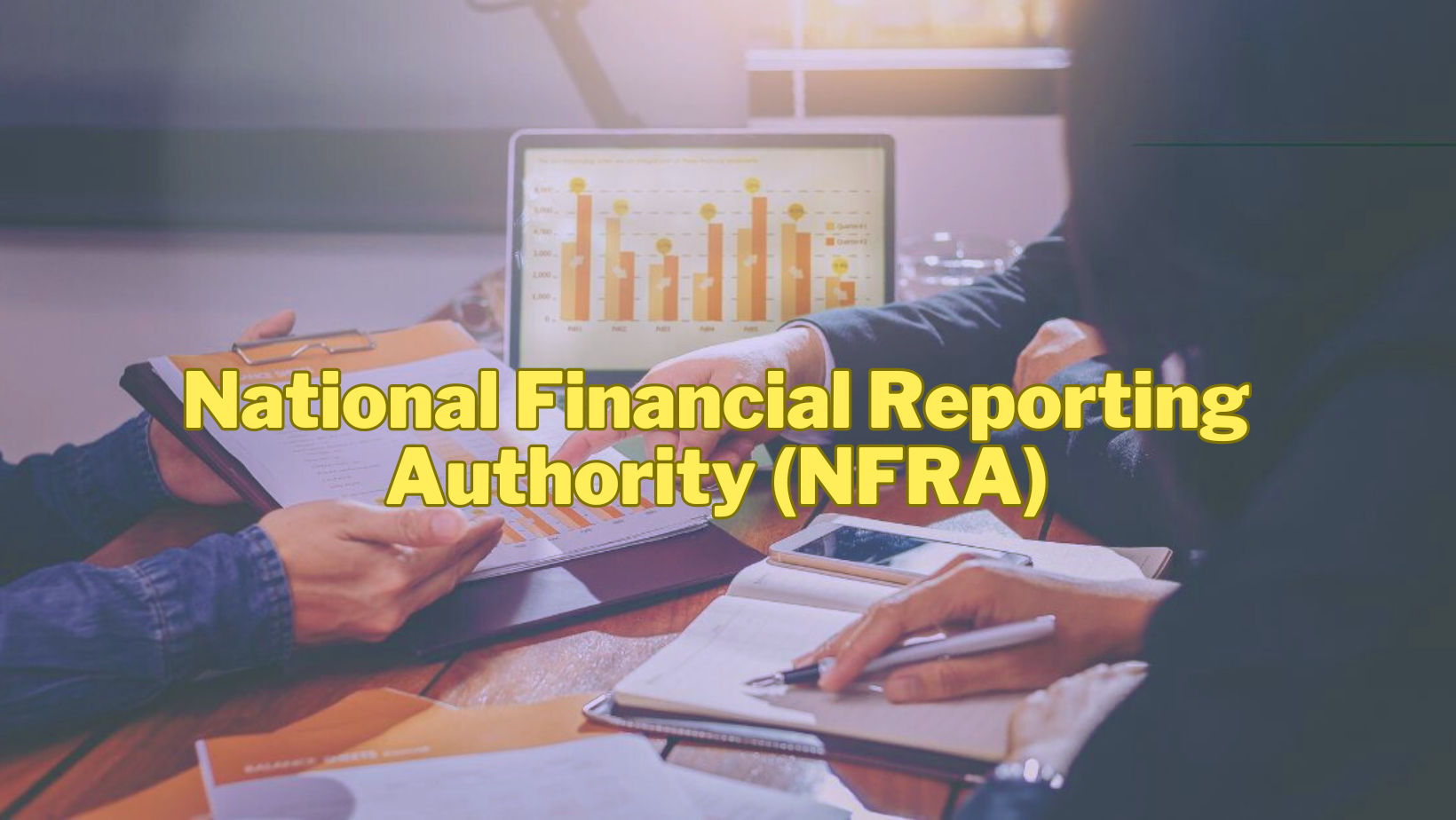
- 25 Jan 2024
Why is it in the News?
The National Financial Reporting Authority (NFRA) is going to inspect the Big Four audit firms as well as other top auditors of large listed entities in 2024, an official familiar with the development told FE.
What is the National Financial Reporting Authority (NFRA)?
- The National Financial Reporting Authority (NFRA) is a statutory body and was constituted on 1st October 2018 by the Government of India under Sub Section (1) of section 132 of the Companies Act, 2013.
- It is responsible for setting accounting standards in the country.
- The Punjab National Bank fraud prompted the government to establish an NFRA as the legal regulator for the auditing profession.
- Its mandate is to improve the quality and consistency of financial statements in the country and ensure that businesses and financial institutions disclose accurate and fair information.
- The National Financial Reporting Authority (NFRA) is located in New Delhi.
- The chairperson since March 2022 is Ajay Bhushan Pandey.
- The NFRA can probe listed as well as unlisted public companies.
- Companies must have a paid-up capital of ?500 crores and an annual turnover of ?1,000 crores.
Functions and Duties:
- As per Sub Section (2) of Section 132 of the Companies Act, 2013, the duties of the NFRA are to:
- Recommend accounting and auditing policies and standards to be adopted by companies for approval by the Central Government;
- Monitor and enforce compliance with accounting standards and auditing standards;
- Oversee the quality of service of the professions associated with ensuring compliance with such standards and suggest measures for improvement in the quality of service;
- Perform such other functions and duties as may be necessary or incidental to the aforesaid functions and duties.
Composition of the NFRA:
- As mandated by the Companies Act, NFRA is comprised of a chairperson appointed by the Central Government and a maximum of 15 members.
- The individuals selected for these roles must possess expertise in accountancy, auditing, finance, or law.
- Furthermore, they are required to declare to the Central Government that there is no conflict of interest or lack of independence in their appointment.
Membership Qualifications:
- All members, including the chairperson, who are in full-time employment, are prohibited from association with any audit firm (including related consultancy firms) during their term of office and for a period of two years after the completion of their term.
Powers of the NFRA:
- The NFRA has the same powers as the Civil Court.
- The NFRA has the authority to investigate matters of misconduct involving CAs and Chartered Accountants.
- It can impose a penalty of not less than ?1 lakh but not exceeding 5 times the fees collected.
- Also, the NFRA may also investigate and take action against individuals who violate the rules of professional conduct.
- It has the power to initiate investigations on its own and upon referral from the Central Government.
India overtakes Hong Kong as the world’s fourth-largest stock market by market capitalisation (Live Mint)

- 24 Jan 2024
Why is it in the News?
Recently, India’s stock market has overtaken Hong Kong’s to rank as the fourth-biggest equity market globally for the first time.
News Summary:
- As of January 22, 2024, data compiled by Bloomberg indicates that the combined value of shares listed on Indian exchanges has reached USD 4.33 trillion, surpassing Hong Kong's USD 4.29 trillion.
- The top three global stock markets are currently the United States, China, and Japan.
What is Stock Market?
- A stock market is a platform where individual and institutional investors trade various securities, including stocks, bonds, Exchange Traded Funds (ETFs), and derivatives.
- Stock markets are categorized into two types:
- Primary Market: Involves the initial offering of new shares, bonds, etc.
- Secondary Market: Encompasses the trading of existing securities like equities and bonds.
- Examples include stock exchanges such as the Bombay Stock Exchange.
Importance of Stock Market:
- For Businesses: Facilitates access to capital, risk diversification, and supports business expansion.
- For Investors: Offers better returns compared to traditional savings instruments, provides tax benefits, and contributes to capital growth.
- For Society: Drives social impact through instruments like Social Impact Bonds, encourages sustainable investment via Green bonds and promotes responsible financial practices.
- For Economy: Mobilizes idle savings, fosters entrepreneurship through venture capital funds, and plays a vital role in economic development.
Challenges in Indian Stock Markets:
- High Volatility: Market fluctuations can be significant, posing challenges for investors.
- Limited Issuer and Investor Base: Constraints on both issuers and investors can adversely impact liquidity.
- Sub-optimal Corporate Debt Market: Dominance of government bonds hampers the growth of the corporate debt market.
- Other Issues: Various factors, such as regulatory complexities and market inefficiencies, can affect the optimal functioning of Indian stock markets.
How is the Stock Market Regulated in India?
- The stock market in India is regulated by various bodies, with the primary regulatory authority being the Securities and Exchange Board of India (SEBI).
- SEBI is a statutory regulatory body established in 1992 to protect the interests of investors and promote the development of the securities market in India.
- It operates under the Securities and Exchange Board of India Act, 1992.
- Also, while SEBI is the primary regulatory authority for the Indian stock market, the Reserve Bank of India (RBI) supports its efforts by ensuring overall financial stability, implementing monetary policies, and regulating aspects related to banking and foreign investments.
- Additionally, these bodies contribute to the nation's economic progress by facilitating capital formation.
What is end-to-end encryption? How does it secure information? (The Hindu)
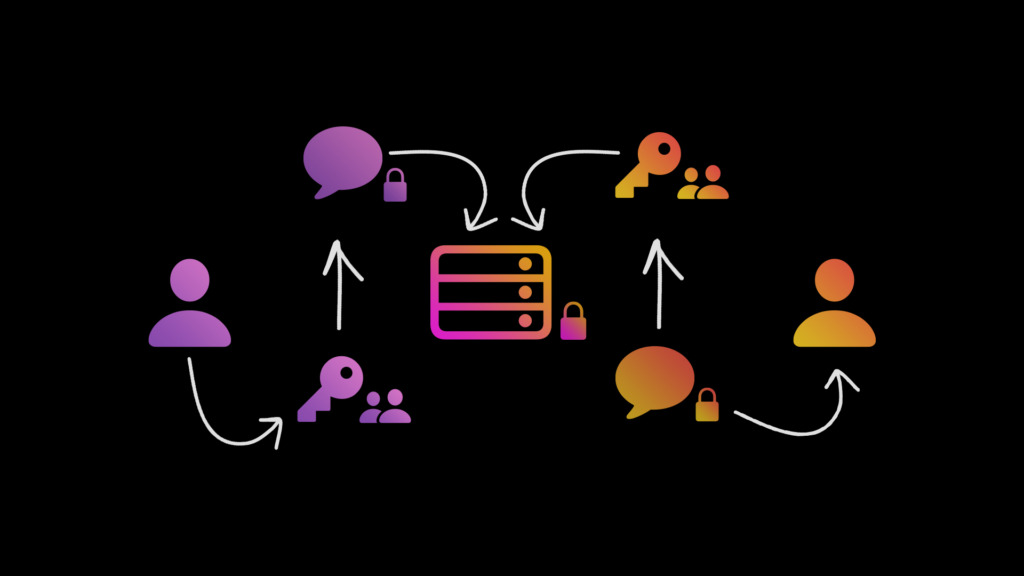
- 24 Jan 2024
Why is it in the News?
There are several ways to encrypt information depending on the level of secrecy and protection required.
What is End-to-end Encryption (E2EE)?
- End-to-end encryption (E2EE) is a type of messaging that keeps messages private from everyone, including the messaging service.
- When E2EE is used, a message only appears in decrypted form for the person sending the message and the person receiving the message.
- The sender is one "end" of the conversation and the recipient is the other "end"; hence the name "end-to-end."
How Does Encryption Work?
- Encryption works by altering data so that only someone who possesses a specific piece of knowledge — known as the key — can interpret the data.
- Keys can take different forms in different contexts.
- With communications over the Internet, a key is a string of bits that plays a role in the complex mathematical equations used to scramble and unscramble data.
- With E2EE, the key that can encrypt and decrypt messages remains saved on a user's device.
What Kind of Encryption Does E2EE Use?
- End-to-end encryption uses a specialized form of encryption called public key encryption (also sometimes called asymmetric encryption).
- Public key encryption enables two parties to communicate without having to send the secret key over an insecure channel.
- Public key encryption relies on using two keys instead of one: a public key and a private key.
- While anyone, including the messaging service, can view the public key, only one person knows the private key.
- Data encrypted with the public key can only be decrypted with the private key (not the public key).
- This contrasts with symmetric encryption, where only one key is used to both encrypt and decrypt.
How Does End-to-end Encryption Support Privacy?
- E2EE ensures that no one can see messages except for the two people who are communicating with each other.
- When implemented properly, it does not require users to trust that a service will handle their data properly.
- Thus, E2EE gives people total control over who can read their messages, enabling them to keep their messages private.
What are the Limitations of End-to-end Encryption?
- E2EE keeps messages secure in transit (as they pass from one person to another).
- But it does not protect messages once they reach their destination.
- E2EE is not guaranteed to be future-proof. When implemented correctly, modern encryption methods are strong enough to resist encryption-breaking efforts from even the most powerful computers in the world.
- But the more powerful in the future like Quantum computers, if developed, would be able to crack modern encryption algorithms.
- Using E2EE keeps messages secure in the present, but it may not keep them secure permanently.
Karpoori Thakur’s vision of social justice inspires our governance model: PM Modi (The Hindu)
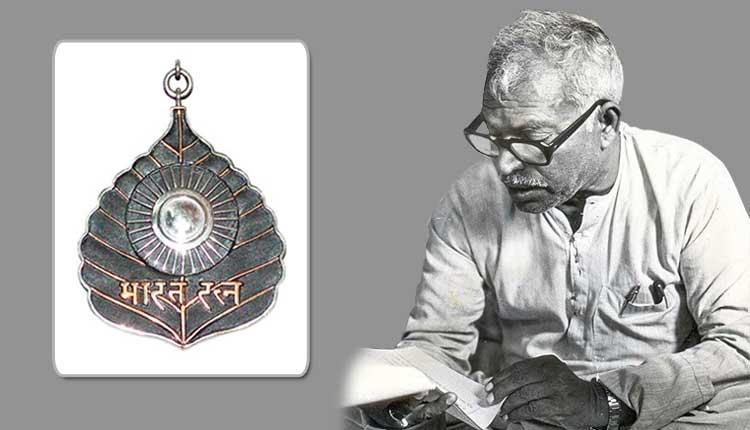
- 24 Jan 2024
Why is it in the News?
Former Bihar CM Karpoori Thakur will be awarded India's highest civilian award, Bharat Ratna, posthumously.
About Jan Nayak Karpoori Thakur:
Pre-Independence Influence:
- Inspired by Mahatma Gandhi and Satyanarayan Sinha, Karpuri Thakur actively participated in the Quit India Movement in 1942 during his schooling days.
- Aligned with the All India Students Federation (AISF), he left his graduation studies to join the movement for India's independence.
Post-Independence Contributions:
- Commencing his career as a village teacher, Thakur re-entered politics, winning the Bihar Legislative Assembly election in 1952 from the Tajpur constituency.
- Notable for his representation of the Socialist Party, he gained legendary status for championing workers' rights and advocating for reservations for backward classes.
- He launched a fast-unto-death agitation in 1970 for labourers' rights at Telco, leading worker strikes and facing arrest.
Key Contributions:
- Social Justice: Thakur dedicated his political journey to addressing systemic inequalities, striving for fair resource distribution and equal opportunities for all.
- OBC Politics: Recognized as the pioneer of OBC politics in Bihar, he implemented quotas for backward classes, laying the foundation for Mandal Commission recommendations.
- Affirmative Action: Strengthened affirmative action for backward classes, ensuring representation and opportunities deserving of their status.
- Selflessness: As Chief Minister, he refrained from benefiting personally from a scheme meant for political leaders' colonies.
- Alcohol Ban: Implemented a comprehensive ban on alcohol in Bihar in 1970.
- Education: Instrumental in establishing schools and colleges, particularly in underdeveloped regions, to make education accessible to historically marginalized communities.
The need to overhaul a semiconductor scheme (The Hindu)

- 24 Jan 2024
Why is it in the News?
The semiconductor Design-Linked Incentive (DLI) scheme, set to undergo a mid-term appraisal, has so far approved only seven start-ups, falling significantly short of its intended goal of supporting 100 over a span of five years since its announcement.
About Design-Linked Incentive (DLI) Scheme:
- Under the DLI scheme, government will provide financial incentives and design infrastructure to domestic companies, start-ups and MSMEs focussed on semiconductor design.
- The DLI scheme has been announced by the Ministry of Electronics and Information Technology (MeitY) to offset the disabilities in the domestic industry involved in semiconductor design in order to not only move up in value-chain but also strengthen the semiconductor chip design ecosystem in the country.
- C-DAC (Centre for Development of Advanced Computing), a scientific society operating under MeitY, will serve as the nodal agency for implementation of the DLI scheme.
Objectives:
-
- Nurturing and facilitating the growth of the domestic companies, startups and MSMEs.
- Achieving significant indigenization in semiconductor content and IPs involved in the electronic products deployed in the country, thereby facilitating import substitution and value addition in the electronics sector.
- Strengthening and facilitating access to semiconductor design infrastructure for startups and MSMEs.
Duration: The scheme shall initially be for three (3) years from 01-01-2022.
- The scheme has three components – Chip Design infrastructure support, Product Design Linked Incentive and Deployment Linked Incentive.
- Under the Chip Design infrastructure support, C-DAC will set the India Chip Centre to host the state-of-the-art design infrastructure (viz. EDA Tools, IP Cores and support for MPW (Multi Project Wafer fabrication) & post-silicon validation) and facilitate its access to supported companies.
- Under the Product Design Linked Incentive component, reimbursement of up to 50% of the eligible expenditure subject to a ceiling of ?15 Crore per application will be provided as fiscal support to the approved applicants who are engaged in semiconductor design.
- Under the Deployment Linked Incentive component, an incentive of 6% to 4% of net sales turnover over 5 years subject to a ceiling of ?30 Crore per application will be provided to approved applicants whose semiconductor design for Integrated Circuits (ICs), Chipsets, System on Chips (SoCs), Systems & IP Cores and semiconductor linked design are deployed in electronic products.
- The DLI Scheme will also take a graded and pre-emptive approach to Identify the Products of national priorities and implement strategies for their complete or near complete indigenisation & deployment thereby taking steps towards the import substitution & value addition in strategic & societal sectors.
Rahul Gandhi prevented from visiting Batadrava Than Significance of this Assam shrine (Indian Express)
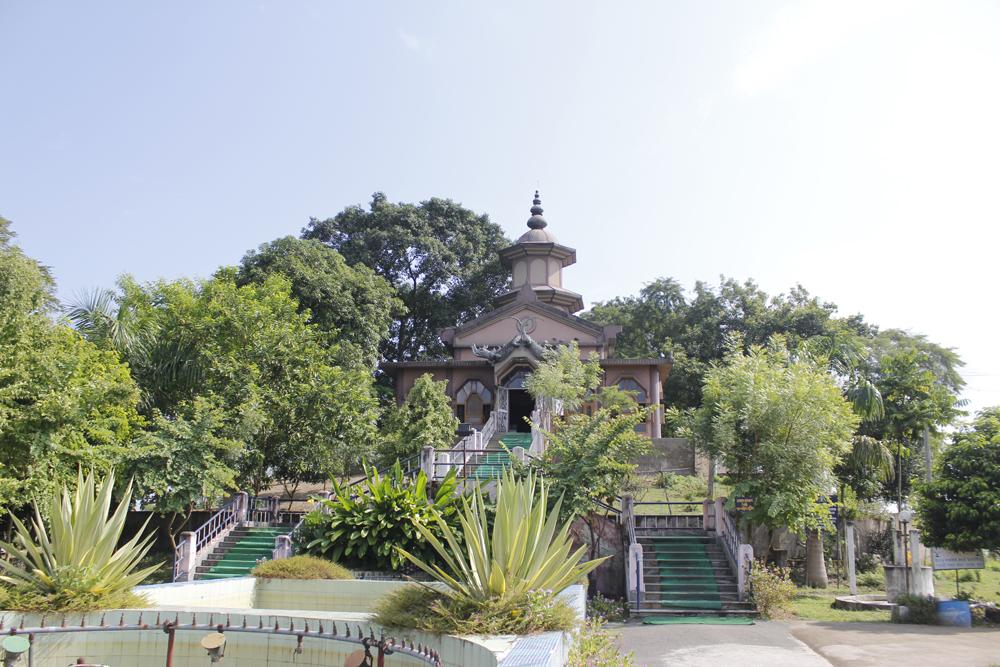
- 24 Jan 2024
Why is it in the News?
Congress leader Rahul Gandhi recently prevented from visiting Assam’s Batadrava Than, where he was going as part of his Bharat Jodo Nyay Yatra.
What is the Batadrava Than?
- The Batadrava Than, or Bordowa Than, is a temple complex at the birthplace of revered Vaishnavite reformer-saint Srimanta Sankardeva (1449-1568).
- Located in Nagaon district, the Batadrava Than, or Bordowa Than, is one of the most sacred sites for Assamese Vaishnavites.
- Sankardeva founded the first-ever Kirtan Ghar at Bordowa in 1494 AD to practise and preach the neo-Vaishnavite faith during the fifteenth century in Assam and propagated the Ek Saran Naam Dharma.
- Various structures within the campus include Natghar (drama hall), Alohighar (guest room), Sabhaghar (assembly hall), Rabhaghar (music room), Hatipukhuri, Aakashi Ganga, Doul mandir (festive temple), and more.
- There is also a mini-museum displaying historical articles and artefacts.
- Bordowa Than has a history of disputes over ownership, leading to its division into two satras: Narowa and Salaguri. In 1958, it was reunified under the banner of 'Bordowa Than,' with both former Satras combined, and a single Namghar was established.
What was Srimanta Sankardeva’s Philosophy?
- He propagated the Ek Saran Naam Dharma.
- The Ek Saran Naam Dharma focussed on worship in the form of bhakti (devotion) to Lord Krishna, through singing and congregational listening of His name and deeds.
- Sankardeva espoused a society based on equality and fraternity, free from caste differences, orthodox Brahmanical rituals and sacrifices.
- His teaching focused on prayer and chanting (naam) instead of idol worship. His dharma was based on the four components of deva (god), naam (prayers), bhakats (devotees), and guru (teacher).
- The Neo-Vaishnavite reformist movement that Sankardeva started is behind the monastic institutions called Thans/Sattras that dot Assam.
- As the saint travelled across Assam, spreading his teachings, these Sattras/Thans were established as centres of religious, social and cultural reforms in the 16th century.
- Today, the Sattras promulgate Sankardeva’s unique “worship through art” approach with music (borgeet), dance (xattriya) and theatre (bhauna).
- Each Sattra has a naamghar (worship hall) as its nucleus and is headed by an influential “Sattradhikar”.
Literary Contributions:
- Srimanta Sankardev's significant literary works include 'Kirtan Ghosa' and 'Gunamala.'
- He is credited with composing sacred songs known as 'Borgeet.'
- His penned dramas, recognized as 'Ankia Naat,' featured Sattriya Dance as an integral component during that era.
- In these 'Ankia Naats,' Srimanta Sankardev employed a narrative style through drama, often portraying the lives of Lord Krishna and Lord Rama.
- His inaugural dramatic piece was 'Chihnajatra,' followed by others like 'Kaliya Daman' and 'Patni Prasad.'
- Remarkably, at the age of twelve, when he commenced formal education, he crafted a poem extolling Lord Vishnu titled 'Karatala Kamala Kamala Dala Nayana.'
- Notably, during this early phase, he composed the poem using only consonants, having not yet learned about vowels.
First meeting of Social Audit Advisory Body reviews social justice schemes (ET)
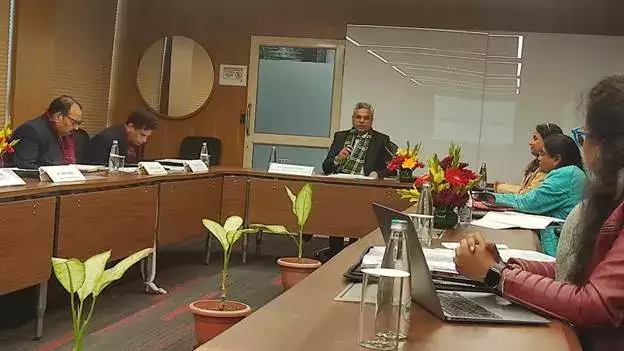
- 23 Jan 2024
Why is it in the News?
The first meeting of the Social Audit Advisory Body (SAAB) was held last week at the conference hall, Dr Ambedkar International Centre, New Delhi.
What is the Social Audit Advisory Body (SAAB)?
- Social Audit Advisory Body (SAAB) is a first-of-its-kind advisory body in India.
- It is set up under the National Institute of Social Defence (NISD), which functions under the Department of Social Justice & Empowerment (DoSJE), Ministry of Social Justice and Empowerment.
- It will guide the Ministry as it institutionalizes social audits for each of its programs.
- It will support the Social Justice Cell of the Social Audit Unit members in developing their abilities.
What is a Social Audit:?
- A social audit is a procedure that involves looking over and evaluating a plan or program.
- People actively participate in the process, which involves comparing government data with actual ground realities.
- Important tenets of SA include:
- Protection of citizens (Suraksha)
- Participation (Bhagidari), and
- Information access (Jaankari).
Implementation of Social Audit:
- The Mahatma Gandhi National Rural Employment Guarantee Act (MGNREGA), among other hallmark programs, now include the provision of Social Audit (SA) with the efforts of the Union Government.
- In order to guarantee SA through specialized Social Audit Units at the state level, DoSJE developed the National Resource Cell for Social Audit (NRCSA).
- The first state to put a social audit statute into effect was Meghalaya.
Significance: Promote transparency and accountability,
-
- strengthen institutions at the grassroots level etc.
Challenges: Lack of awareness among stakeholders, apathetic attitude of implementing agency etc.
Steps for SocialAudit:
- Orientation and Sensitization:: Conducted by the implementing agency.
- Presentation: Creating a social audit team.
- Verification: Verifying information with beneficiaries, inmates, stakeholders, and institution staff.
- Validation: Presenting the initial report for validation.
- Presentation and Action: Sharing findings at the district level with all stakeholders present.
Restoring Lake Victoria: CSE, Tanzanian authorities hold multi-nation stakeholder consultation (DownToEarth)
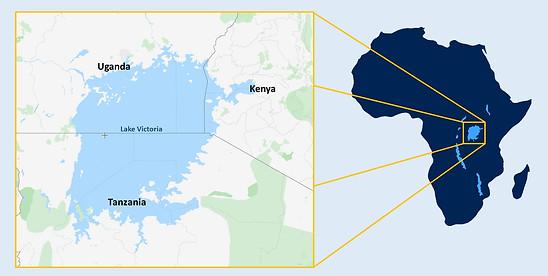
- 23 Jan 2024
Why is it in the News?
Lake Victoria, the largest freshwater lake in Africa and the world’s second-largest faces numerous environmental challenges that demand collective efforts for restoration and conservation.
About Lake Victoria:
Geography:
- Located in East Africa and bordered by Tanzania, Uganda, and Kenya.
- Africa's largest lake by area (approximately 59,947 km²) and the world's second-largest freshwater lake after Lake Superior.
- Lies in a shallow depression within the East African Rift Valley.
- The average depth of 40 meters, maximum depth of 80-81 meters.
Hydrology:
- The main source of water is rainfall, supplemented by rivers like the Kagera.
- The only outlet is the Victoria Nile, which flows into the White Nile and ultimately the Nile River.
- Plays a crucial role in the water supply and livelihoods of millions of people in East Africa.
Ecology:
- Supports a diverse ecosystem with over 200 fish species, including the Nile perch and Nile tilapia.
- Important habitat for birds, reptiles, and amphibians.
- Facing challenges like pollution, overfishing, and invasive species.
History and Culture:
- Named after Queen Victoria by British explorer John Hanning Speke in 1858.
- Has been a vital source of transportation, trade, and food for centuries.
- Plays a significant role in the cultural traditions and folklore of the surrounding communities.
With no iron or steel, Ayodhya temple is a study in sandstone (The Hindu)
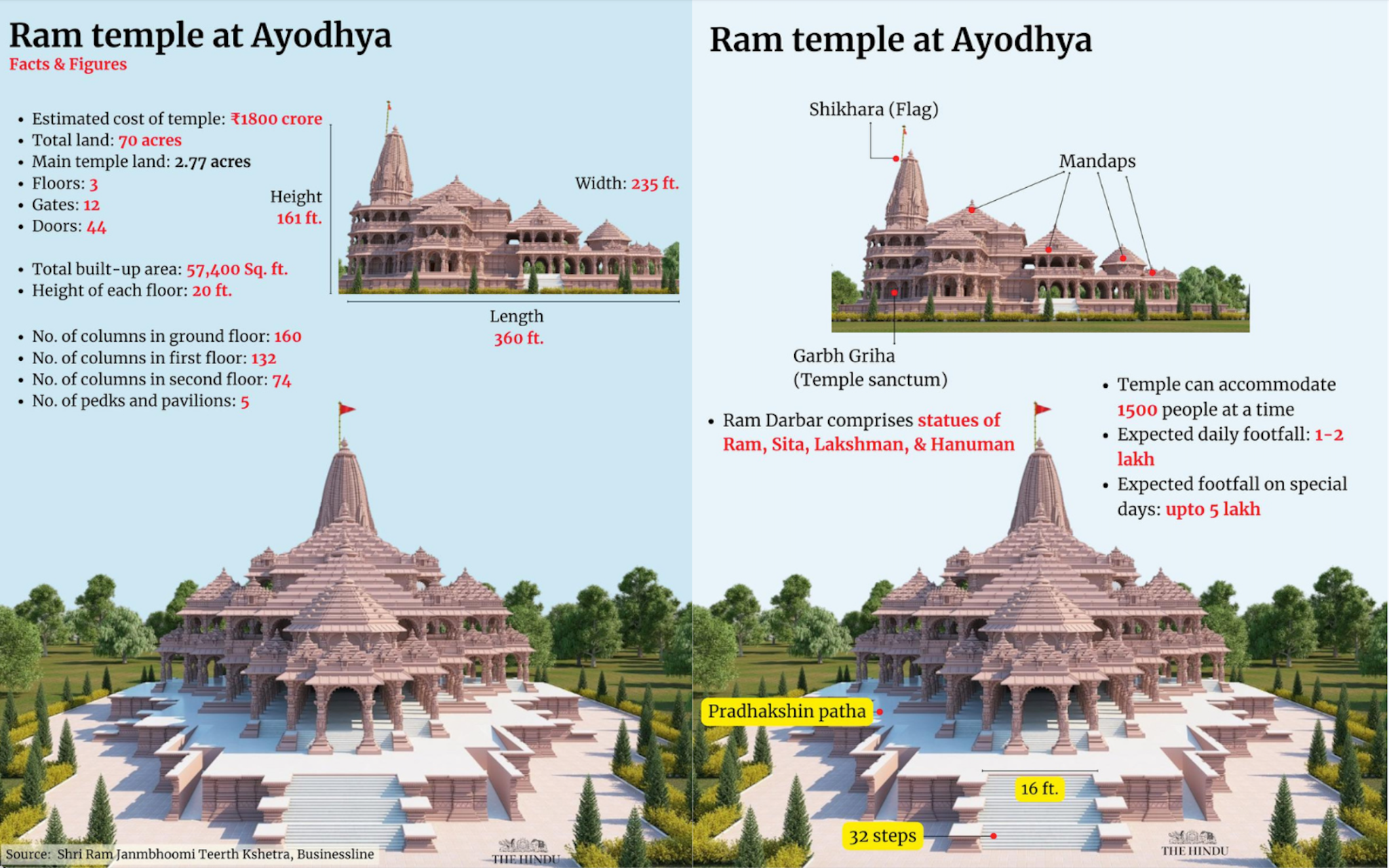
- 23 Jan 2024
Why is it in the News?
A new landmark of India — both structural and spiritual — rose on Ayodhya's horizon on January 22 in the form of a new-age architectural marvel of elegant sandstones, diligently carved by craftspeople with dedication and devotion to Lord Ram.
Major Features of the Ram Temple:
- No iron or steel has been used in the construction of the grand structure.
- Stones have been sourced from Rajasthan's Bansi Paharpur area.
- The entire temple superstructure will eventually be three storeys — ground plus two floors.
- Nagara style: The temple complex, built in the traditional Nagara style, will be 380 feet long from the east to the west, 250 feet wide and 161 feet high.
- Each floor of the temple will be 20 feet high and have a total of 392 pillars and 44 gates.
- Images of Lord Hanuman, other deities, peacocks and flower patterns have been carved onto the stones, lending the structure a divine look.
- Unique feature: Around the grand temple is a rectangular periphery called percota, a feature found in temples in south India, but not generally in north India.
- The percota will be 14 feet wide and the periphery span 732 metres.
- The temple will be nestled within the percota periphery.
- Ornate statues of elephants, lions, Lord Hanuman and Garuda were installed at the main entrance leading to the temple.
- These statues have also been made using sandstone brought from Bansi Paharpur.
- An ancient Shiva temple that exists on the Kuber Tila has also been revitalised.
- Green Complex: About 70 per cent of the complex will be a green area.
- "The green area includes portions which are very dense and, in some segments, even sunlight hardly filters through.
- The complex will have two sewage treatment plants — a water treatment plant and a dedicated electricity line from the powerhouse.
- The fire brigade post will be able to source water from an underground reservoir.
Additional Architectural Aspects:
- A time capsule, located approximately 2,000 feet below the ground beneath the temple, houses a copper plate inscribed with pertinent information about the Ram Mandir, Lord Rama, and Ayodhya.
- The objective of this time capsule is to preserve the temple's identity for posterity, preventing it from fading into obscurity in the years to come.
- Engineered as an earthquake-resistant structure, the temple boasts an estimated age of 2500 years.
PM Modi extends his greetings to the people of India on Parakram Diwas (Indian Express)
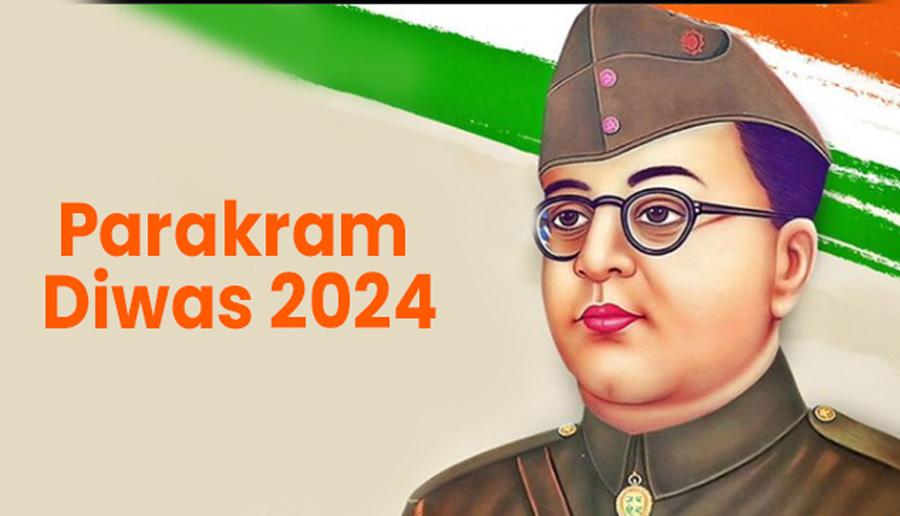
- 23 Jan 2024
Why is it in the News?
Prime Minister Narendra Modi extended greetings to the people of India on Parakram Diwas on 23rd January.
Why Parakram Diwas is Celebrated?
- The government officially announced on January 19, 2021, that January 23 be observed as Parakram Diwas in order to pay tribute to Netaji’s relentless pursuit of India’s freedom.
- The government of India has decided to celebrate his birthday on the 23rd day of January every year as “PARAKRAM DIWAS” to inspire people of the country, especially the youth, to act with fortitude in the face of adversity as Netaji did, and to infuse in them a spirit of patriotic fervour,” the Centre had said in a notification.
- Parakram Diwas, which translates to “Day of Valour”.
- In 2021, the first event took place at Victoria Memorial Hall, Kolkata.
- In 2022, a hologram statue of Netaji was unveiled at India Gate, and in 2023, the 21 largest unnamed islands of Andaman & Nicobar Islands were named after the 21 Param Vir Chakra awardees and a model of National Memorial dedicated to Netaji which was supposed to be built on Netaji Subhas Chandra Bose Dweep, was unveiled.
Key Facts About Subhas Chandra Bose:
- Born on January 23, 1897, in Cuttack, Orissa.
- In 1920, he successfully passed the civil service examination but resigned from his position in April 1921 after learning about the nationalist turmoil in India.
- A prominent Indian nationalist leader, he played a pivotal role in the Indian independence movement against British colonial rule.
- Joined the Indian National Congress and actively participated in the struggle for independence.
- Elected president of the Indian National Congress for two consecutive terms but resigned due to ideological conflicts with Mahatma Gandhi.
- In 1939, Bose founded the Forward Bloc, an organization aimed at unifying anti-British forces in India.
- Fled from India at the beginning of World War II, travelling to the Soviet Union, Germany, and Japan in pursuit of an alliance against British forces in India.
- With Japanese assistance, reorganized and led the Indian National Army, comprising Indian prisoners-of-war and plantation workers from Southeast Asia.
- Established the Azad Hind Government in exile with Japanese support, leading the Indian National Army in battles against the allies in Imphal and Burma.
PM Modi announces solar roof-top scheme for one crore households (HT)
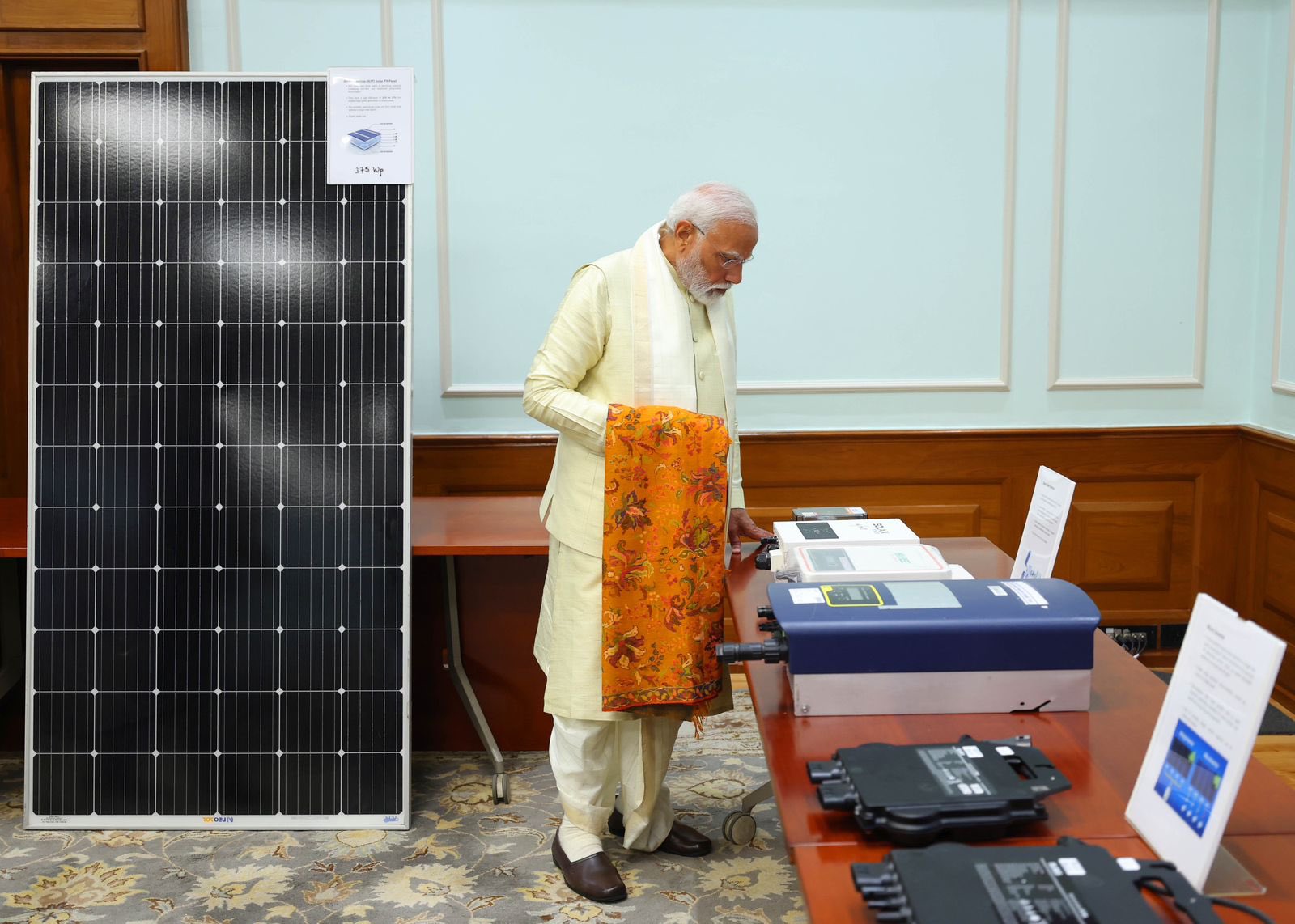
- 23 Jan 2024
Why is it in the News?
Prime Minister Narendra Modi on Monday announced the 'Pradhan Mantri Suryodaya Yojana' under which one crore households will get rooftop solar across the nation.
What is 'Pradhan Mantri Suryodaya Yojana'?
- The scheme aims to equip one crore poor to middle-class households with rooftop solar panels in a bit to provide electricity from solar energy.
- The scheme would not only reduce the electricity bill of the poor and middle class but would also make India self-reliant in the energy sector.
- Rooftop solar panels are the photovoltaic panels installed on the roof of a building which is connected to the main power supply unit.
- Thus, it reduces the consumption of grid-connected electricity and saves electricity costs for the consumer.
- In a solar rooftop system, there is only an upfront capital investment and minimal cost for maintenance.
- Under this scheme, one crore households will get solar rooftops.
- Moreover, it will offer additional income for surplus electricity generation.
- The consumer can choose any vendor on the national portal and after installation, the subsidy is sent directly to the bank account of the consumer.
- The Pradhanmantri Suryodaya Yojana is a new scheme but very similar to the previously announced Rooftop Solar Programme in 2014.
- The previous scheme had aimed to produce 40,000 megawatts (MW) or 40 gigawatts (GW) of solar power by 2022.
India's Advancements in Solar Energy:
- At the end of last year, 2023, India’s solar power generation stood at 73.31 GW, up from 2022’s 63.3 GW.
- However, rooftop solar power generation only stands at around 11.08 GW as of December 2023.
- The total solar power generated in the nation, Rajasthan leads the pack with 18.7 GW while Gujarat follows with 10.5 GW.
- However, when talking about rooftop solar power, Gujarat is at peak position — with 2.8 GW — followed by Maharashtra at 1.7 GW.
- India has more than 300 million households and an average of 300 sunny days each year, which has tremendous potential for rooftop solar installations in residential spaces.
- However, experts note that despite several measures, India’s rooftop solar power generation is not where it should be, listing reasons for the situation.
- The primary reason for rooftop solar not becoming popular is that it is still an expensive option for many.
- There is also a lack of awareness.
Importance of Solar Power to India:
- Harnessing the power of the sun to generate electricity is important to India for multiple reasons.
- If India wants to achieve its aim of becoming net zero by 2070, it has to look towards the sun.
- In fact, at COP26, in November 2021, India committed to meet 50 per cent of its electricity requirements from renewable energy sources by 2030.
- For these aims to be met, India has to harness the full capacity of the sun.
- Moreover, India’s share of global energy demand is predicted to double to 11 per cent in 2040, making it imperative to enhance energy security and self-sufficiency in power generation without increasing environmental costs.
- This increase in power demand is likely to increase India’s reliance on coal, oil and natural gas as a source of energy.
- However, additional imports of oil and increased domestic production of coal will not only fall short of energy demand but will also entail economic and environmental costs.
- The expansion of solar power units and increased reliance on solar power allow India to enhance energy security in the face of rising demand.
- Furthermore, India is already facing depleting groundwater levels, owing to which the nation must shift its energy resources away from water.
Davos meeting 2024: 5 key takeaways (Indian Express)
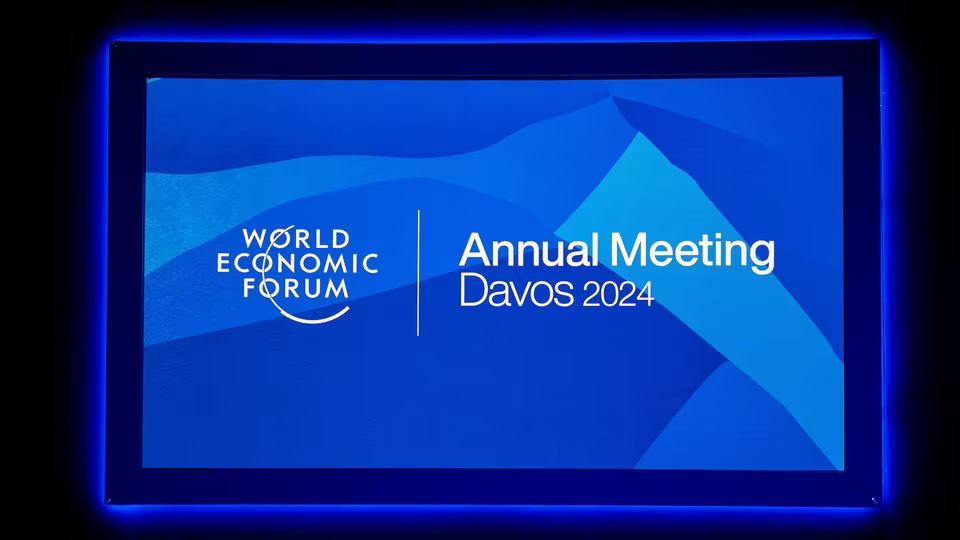
- 22 Jan 2024
Why is it in the News?
This year’s edition of the World Economic Forum (WEF) annual meeting was held from January 15 to January 19.
Key Highlights from Davos Meeting 2024:
- Artificial Intelligence (AI): The focal point of discussion at this year's World Economic Forum (WEF) meeting was Artificial Intelligence (AI).
- Conversations delved into its transformative potential for human welfare, addressing concerns such as the necessity for regulation, apprehensions about job losses, risks associated with impersonation and misinformation, and the potential exacerbation of inequalities.
- Despite acknowledging these challenges, participants generally agreed that the positive aspects of AI outweigh the negatives, with no substantial threat to human intelligence.
- War and Uncertainty: The summit underscored the risks emanating from a delicate geopolitical landscape, ongoing conflicts in the Middle East and Europe, threats to global supply chains, and uncertainties surrounding food security.
- Notably, the head of the Palestine Investment Fund estimated a requirement of at least $15 billion solely for the reconstruction of houses in Gaza.
- However, Arab states asserted their reluctance to fund reconstruction without a guarantee of lasting peace.
- Climate: The imperative for businesses to adapt to climate change and nations to collaborate despite differences in combating it emerged as another key theme.
- Discussions emphasized the necessity for developed countries to assist in financing climate action in developing nations to prevent a widening inequality that could result in winners and losers.
- China's Economy: Against the backdrop of a slowing economy, China sought increased investment from the West, which has experienced some cooling.
- With a GDP growth of 5.2% in 2023, still below pre-pandemic levels, China grappled with efforts by the United States to isolate it, particularly evident in the semiconductor trade standoff.
- India-Specific Observations: McKinsey and Company's assessment of Davos 2024 highlighted India's rapid transformation as one of the fastest-growing large economies globally.
- The summit marked the launch of the Global Good Alliance for Gender Equity and Equality, endorsed by the WEF and the Government of India.
- Originating from the G20 Leaders' Declaration, the alliance aims to bring together global best practices, knowledge sharing, and investments in women's health, education, and enterprise.
- Supported by the Bill and Melinda Gates Foundation, the alliance will be hosted by the CII Centre for Women Leadership, with the World Economic Forum as a 'Network Partner' and Invest India as an 'Institutional Partner.'
About the World Economic Forum:
- The World Economic Forum is the International Organization for Public-Private Cooperation.
- The Forum engages the foremost political, business, cultural and other leaders of society to shape global, regional and industry agendas.
- It was established in 1971 by German engineer and economist Klaus Schwab.
- It is a not-for-profit foundation and is headquartered in Geneva, Switzerland.
- The Forum strives in all its efforts to demonstrate entrepreneurship in the global public interest while upholding the highest standards of governance.
Reports released by WEF:
-
- Global Gender Gap Index
- Global Risks Report
- Fostering Effective Energy Transition Report
- Global Cyber Security Outlook
- Global Competitiveness Report
- Travel and Tourism Development Index
About Davos Meet:
- The World Economic Forum (WEF) organizes a meeting annually at the end of January in Davos, a mountain resort in Graubünden, in the eastern Alps region of Switzerland.
- The Annual Meeting, also known as the Davos Agenda, has the objective of orienting global leaders on the imperatives of the year ahead.
- This year's theme for the Annual Meeting in Davos is 'From Lab to Life: Science in Action'.
MeitY signs MoU with Cuba for cooperation on digital public infrastructure (ET)
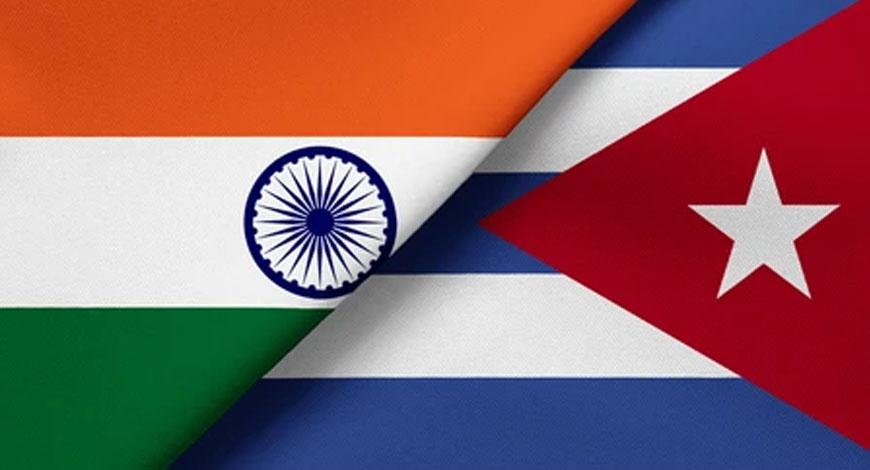
- 22 Jan 2024
Why is it in the News?
India and Cuba have signed an MoU for cooperation in the field of sharing successful digital solutions implemented at the population scale for digital transformation.
India and Cuba Bilateral Relations:
- India and Cuba share a robust and longstanding diplomatic camaraderie, marked by warmth and amity.
- In a gesture of early support, India was among the first nations to acknowledge and establish relations with the new Cuban government post the revolutionary events in January 1959.
- Trade Dynamics: The bilateral trade engagement, while moderate, exhibits a diverse array of commodities.
- India exports pharmaceutical products, organic chemicals, plastic goods, medical equipment, engineering items, textiles, metal products, mineral oil products, and tools to Cuba.
- Conversely, Cuba primarily imports pharmaceuticals and tobacco products from India.
- Energy Partnership: A pivotal facet of India-Cuba relations is their collaboration in the energy sector.
- As a member country and Vice-President of the Latin America & the Caribbean region at the International Solar Alliance (ISA), Cuba plays a significant role in fostering energy cooperation between the two nations.
- Advancements in Science & Technology, Biotechnology, and Health: The bilateral relations in the domains of science, technology, and health have been fortified through ministerial-level visits from both nations.Development Collaboration: Prioritizing development assistance has been a cornerstone of their bilateral ties.
- India has extended disaster relief assistance to Cuba in the aftermath of hurricanes that have afflicted the region over the years.
- Cultural Relations: Cuban appreciation for Indian culture and civilization is evident, with figures like Mahatma Gandhi, Jawaharlal Nehru, and Rabindranath Tagore holding a special place in Cuban hearts.
- Indian Diaspora: Although the Indian community in Cuba is relatively small, it includes descendants of Indians who migrated to Cuba in the early twentieth century from Jamaica and other parts of the West Indies to contribute to sugarcane plantations.
What is Digital Public Infrastructure (DPI)?
- DPI is a digital network that enables countries to safely and efficiently deliver economic opportunities and social services to all residents.
- DPI can be compared to roads, which form a physical network that connects people and provides access to a huge range of goods and services.??
- DPI allows people to open bank accounts and receive wages faster and more easily.
- It allows governments to support citizens more quickly and efficiently, especially during emergencies.
- And it enables entrepreneurs to reach customers far and wide.??
- A strong DPI has three foundational systems—identity, payments, and data exchange—that together can make life easier in important ways.?
- When the three core systems—identity, payments, and data exchange—exist simultaneously and can talk to one another, people, businesses, and governments can reap the full benefits of DPI.
- Over time, safe and inclusive DPI creates vibrant and competitive economies.?
Indigenous mobile hospital saves life at ‘Pran Pratishta’ event in Ayodhya (The Hindu)
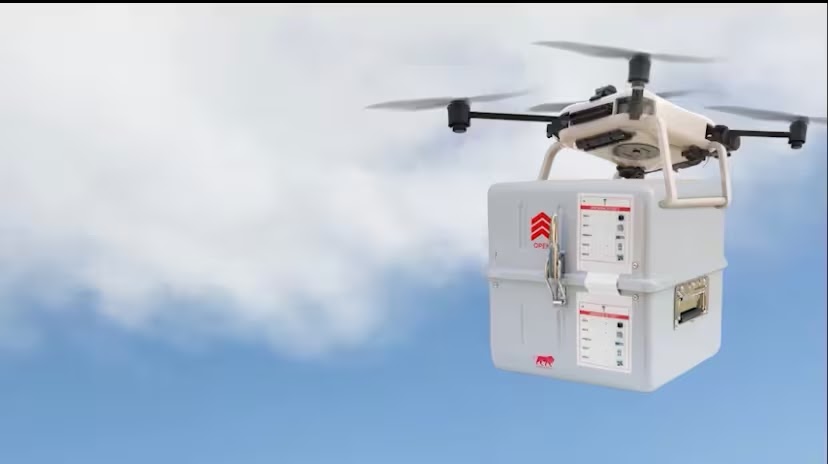
- 22 Jan 2024
Why is it in the News?
An Indigenous mobile hospital at the 'Pran Pratishta' event in Ayodhya played a life-saving role as 65-year-old Dharmacharya Pramukh and VHP member Ramkrishna Srivastava, experiencing a heart attack and sudden medical emergency, collapsed unconscious.
What is Aarogya Maitri Aid Cube?
- It is India’s first portable hospital that can be airlifted to a disaster area and assembled in an hour.
- This “flatpack” field hospital consists of 72 small cubes equipped with tents and customised medical equipment.
- It is built under the Bharat Health Initiative for Sahyog Hita and Maitri (BHISHM) and the hospital is reportedly designed to treat up to 200 patients.
- The cubes, each of which weighs below 15kg and measures 38cm x 38cm x 38cm, are resilient enough to be dropped from a plane or helicopter.
- The ‘Aarogya Maitri Cube Cage’ has three frames containing 12 mini-cubes.
- A single cage can fit a total of 36 mini-cubes.
- At least five trained people are needed to assemble the cubes into a functional hospital in an hour.
- These cubes can be flown to a war zone or a remote area hit by natural disasters such as earthquakes and floods.
- The product was developed under Prime Minister Narendra Modi’s ambitious ‘Project BHISHM’ which aims to support developing countries affected by natural disasters or humanitarian crises.
How the portable hospital will help?
- The portable hospital is capable of facilitating life-saving surgery on remote and tough terrains.
- The 72 cubes contain different equipment such as portable ventilators, solar panel-based generators, ultrasound machines, digital imaging radiography machines, defibrillators, high-mounted OT lights, stretchers, modern surgical devices, and portable laboratories.
- A line of Ayurvedic products was added to the list of items in the cubes at the suggestions of PM Modi.
- “HLL Life Care is the government’s nodal agency for sourcing the Aarogya Maitri Cube, whereas the manufacturing has been undertaken by multiple sellers as it includes a variety of products.
- Billed as the “world’s first portable disaster hospital”, the kit is waterproof and corrosion-proof.
- A tablet computer is installed inside the cube pack to prevent mistakes while setting up the structure.
- If the immediate need at the site is for life-saving surgery, then the operating theatre can be assembled first. This takes just 10 minutes. The doctors can start surgery while the remaining cubes are assembled.”
- The portable hospital can “provide critical medical care to 100 survivors for up to 48 hours, making it a lifeline on remote and tough terrains where immediate medical attention is needed. The cubes [which are self-sustained healthcare units] can handle bullet, burn, head, spinal and chest injuries, fractures, and major bleeding.
- India is now equipped and ready to supply this to any country in need.
- t can also be utilised in regions across India that need medical support due to epidemics, high elevations, or challenging landscapes.
- This could play a significant role in the management of public health.
- As a goodwill gesture, India has already given two Aarogya Maitri Cubes to Myanmar and one is being prepared for Sri Lanka.
After tiny chopper Ingenuity, NASA planning to send giant fixed-wing plane Maggie to Red Planet (TOI)
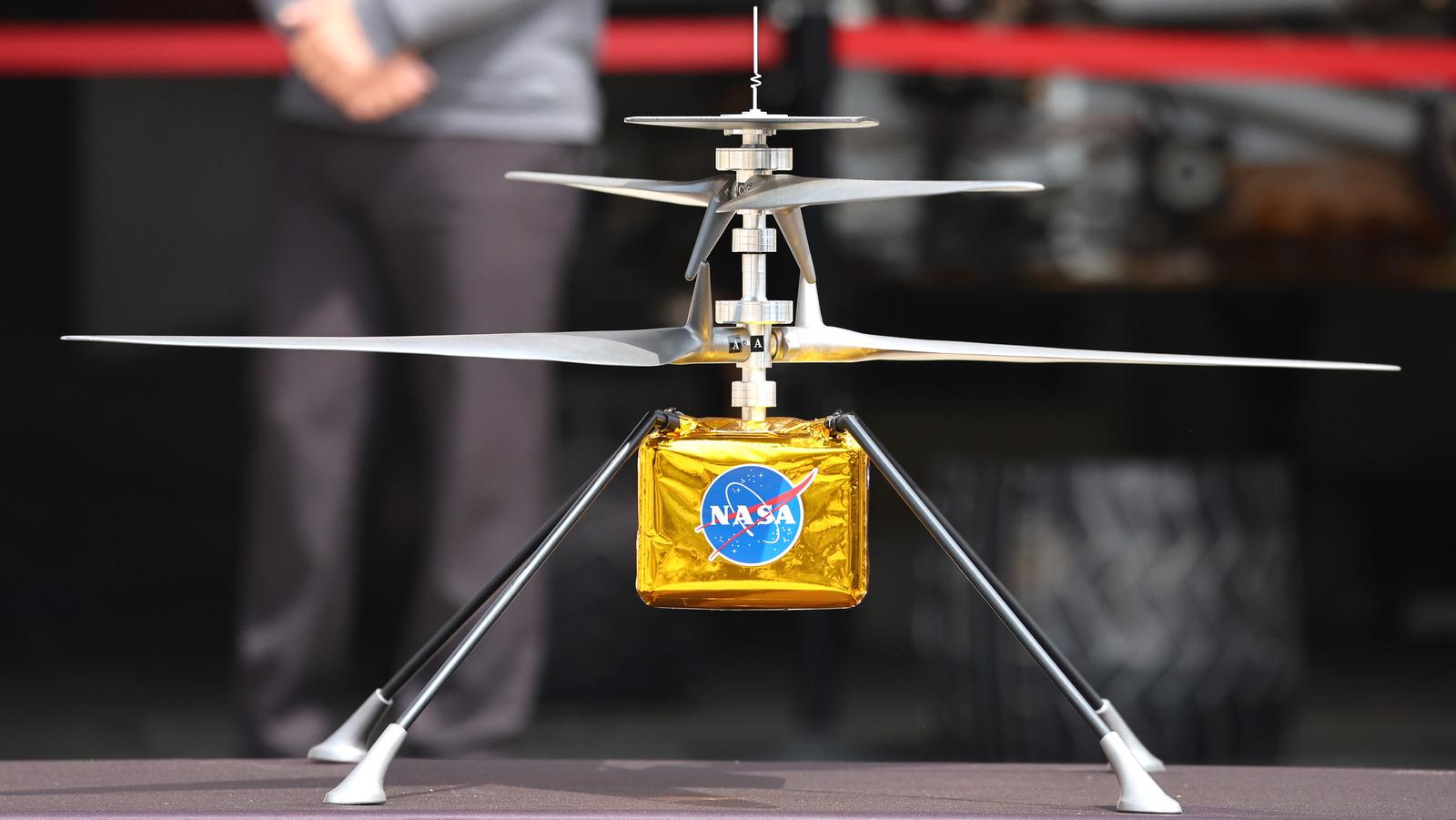
- 22 Jan 2024
Why is it in the News?
In its pursuit of extensively exploring Mars to find signs of water, Nasa is considering a proposed idea to send a giant fixed-wing plane to the Red Planet.
What is Ingenuity Mars Helicopter?
- The Ingenuity Mars Helicopter is a small, autonomous aircraft that is part of NASA's Mars 2020 mission.
- It was deployed to the surface of Mars on April 3, 2021, and made its first powered, controlled flight on another planet on April 19, 2021.
- Ingenuity is a technology demonstration mission, and its main goal is to show that powered flight is possible on Mars.
- The helicopter has four carbon-fiber blades creating enough lift to overcome the thin Martian atmosphere.
- It is powered by solar cells and can fly for up to 90 seconds at a time.
- Since its first flight, Ingenuity has completed 72 flights, far exceeding its original planned five flights.
- It has flown a total of 17 km and reached an altitude of 24 m.
- The helicopter has also helped to scout ahead for the Perseverance rover, taking images and collecting data from areas that the rover cannot reach.
- Ingenuity's success has paved the way for future aerial exploration of Mars.
- Future helicopters could be used to scout for landing sites, study the Martian surface in more detail, and even carry small payloads of scientific instruments.
About Perseverance Rover:
- Perseverance is a robotic rover exploring Jezero Crater on Mars as part of NASA's Mars 2020 mission.
- Launched on July 30, 2020, it successfully landed on February 18, 2021, making it the most sophisticated and heaviest rover ever sent to Mars.
Mission Highlights:
- Seeking signs of ancient microbial life: Perseverance is equipped with several instruments to analyze Martian rocks and soil for potential signs of past life.
- Collecting rock samples: The rover drills and collects rock samples that will be cached on Mars for potential return to Earth by future missions.
- Testing technology for future missions: Perseverance is demonstrating new technologies that will be crucial for future human exploration of Mars, such as the MOXIE instrument that produces oxygen from the Martian atmosphere and the Ingenuity helicopter, the first powered aircraft to fly on another planet.
- Perseverance Achievements:
- Finding evidence of an ancient lake in Jezero Crater that may have been habitable for microbial life.
- Collecting the first rock samples from Mars that will be returned to Earth.
- Demonstrating the feasibility of using a helicopter on Mars (the Ingenuity helicopter hitched a ride with Perseverance).
Indian Immunologicals rolls out indigenously developed Hepatitis A vaccine (Financial Express)
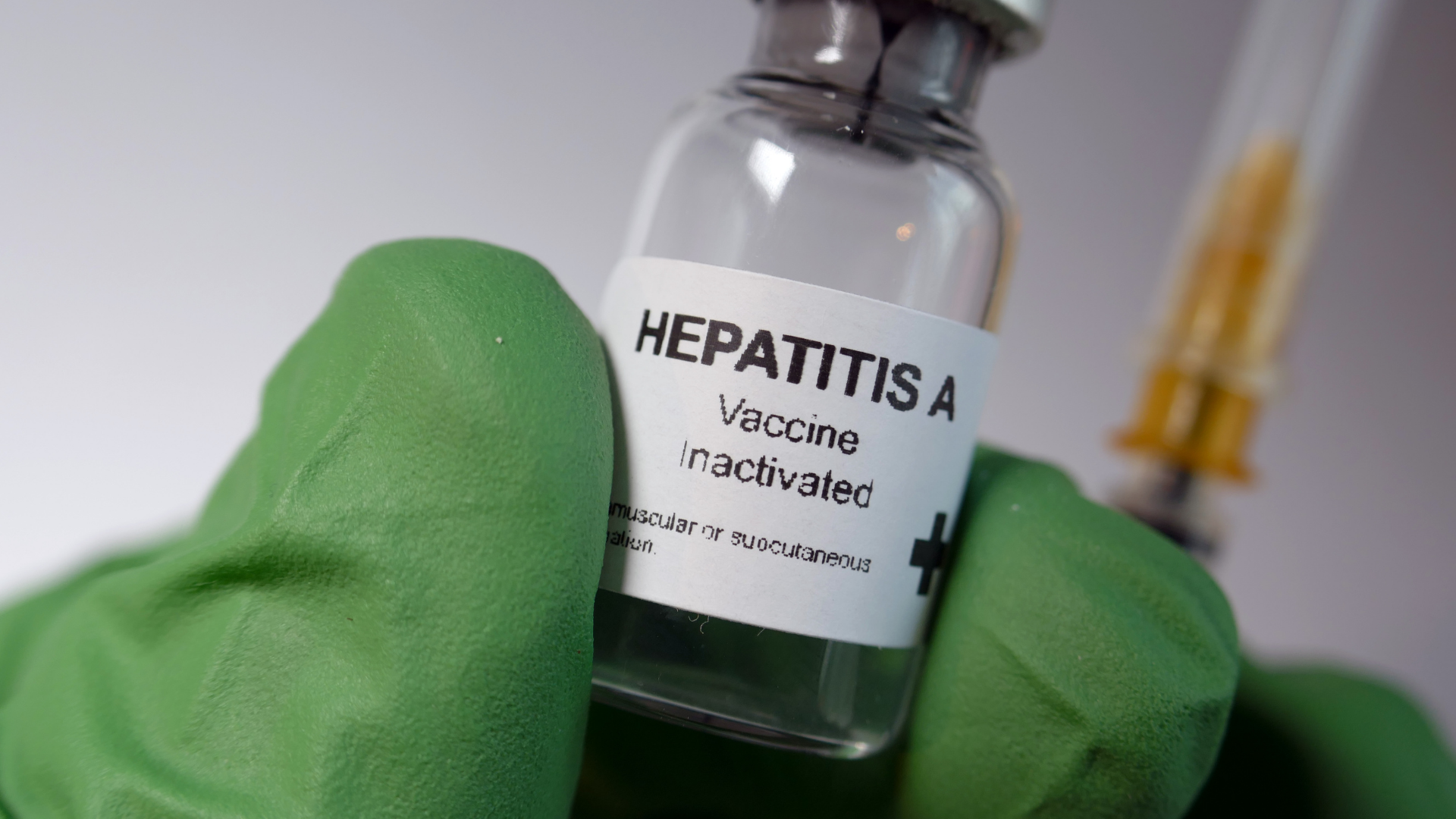
- 22 Jan 2024
Why is it in the News?
Indian Immunologicals Ltd (IIL), a wholly-owned subsidiary of the National Dairy Development Board (NDDB) recently announced that it has launched India’s first indigenously developed Hepatitis A vaccine, Havisure.
About Havisure Vaccine:
- The vaccine is effective in preventing the disease and is recommended for children in routine immunization.
- It is a two-dose vaccine wherein the first dose is administered at above 12 months of age and the second dose is given at least after 6 months of the first dose.
- The vaccine is also recommended for individuals who are at risk of exposure or travel to the regions with high hepatitis A prevalence.
- In addition to this people with occupational risk of infection and suffering from chronic liver diseases also need Hepatitis A vaccination.
Key Facts About Hepatitis A:
- Hepatitis A is an inflammation of the liver caused by the hepatitis A virus (HAV).
- The virus is primarily spread when an uninfected (and unvaccinated) person ingests food or water that is contaminated with the faeces of an infected person.
- The disease is closely associated with unsafe water or food, inadequate sanitation, poor personal hygiene and unprotected sex.
- Unlike hepatitis B and C, hepatitis A does not cause chronic liver disease but it can cause debilitating symptoms and rarely fulminant hepatitis (acute liver failure), which is often fatal.
- Hepatitis A occurs sporadically and in epidemics worldwide, with a tendency for cyclic recurrences.
- Epidemics related to contaminated food or water can erupt explosively, such as the epidemic in Shanghai in 1988 that affected about 300,000 people.
- They can also be prolonged, affecting communities for months through person-to-person transmission.
- Hepatitis A viruses persist in the environment and can withstand food production processes routinely used to inactivate or control bacterial pathogens.
- Geographical distribution: Infection is common in low- and middle-income countries with poor sanitary conditions and hygienic practices, and most children (90%) have been infected with the hepatitis A virus before the age of 10 years, most often without symptoms.
- Transmission: The hepatitis A virus is transmitted primarily by the fecal-oral route; that is when an uninfected person ingests food or water that has been contaminated with the feces of an infected person.
- In families, this may happen through dirty hands when an infected person prepares food for family members.
- Waterborne outbreaks, though infrequent, are usually associated with sewage-contaminated or inadequately treated water.
- Symptoms: Symptoms of hepatitis A range from mild to severe and can include fever, malaise, loss of appetite, diarrhoea, nausea, abdominal discomfort, dark-coloured urine and jaundice (yellowing of the eyes and skin).
- Not everyone who is infected will have all the symptoms.
- Treatment: There is no specific treatment for hepatitis A.
- Recovery from symptoms following infection may be slow and can take several weeks or months.
- Prevention: Improved sanitation, food safety and immunization are the most effective ways to combat hepatitis A.
‘Global Good Alliance for Gender Equity and Equality’ launched at Davos with support from India (DD)
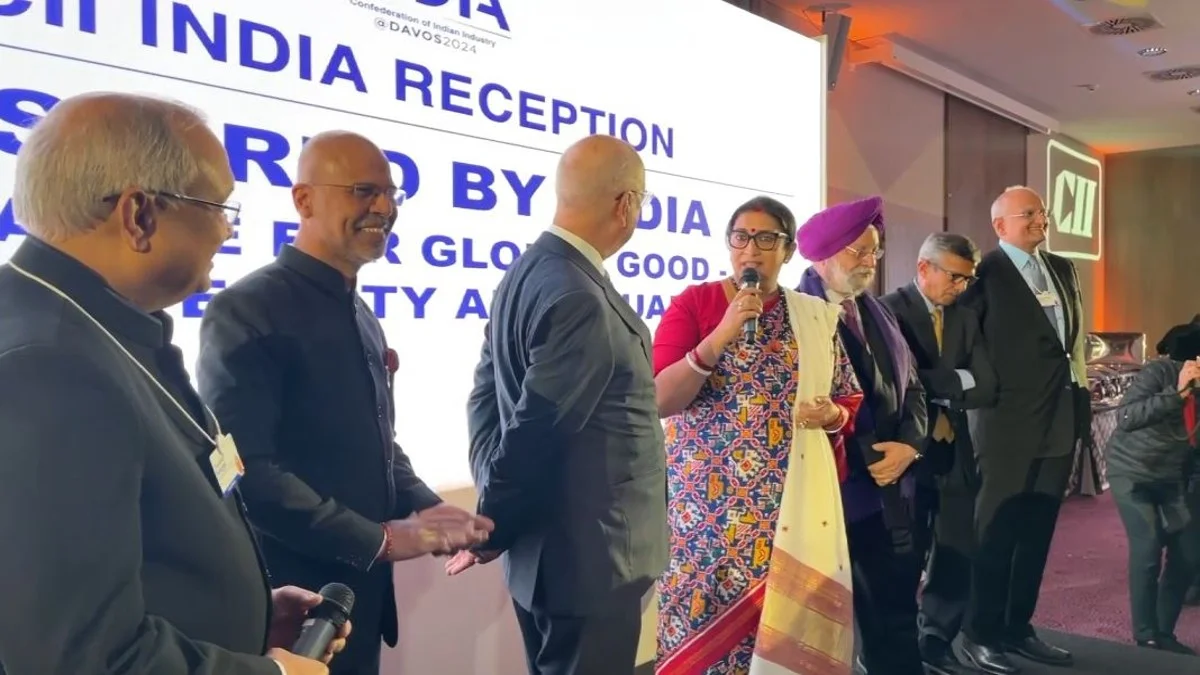
- 20 Jan 2024
Why is it in the News?
Recently, India announced a new alliance for global good, gender equity, and equality at the World Economic Forum Annual Meeting.
About Global Alliance for Global Good- Gender Equity and Equality:
- It primary aims to unite global best practices, promote knowledge-sharing, and invest in women's health, education, and enterprise.
- It follows the initiatives of the G20 framework, including the Business 20, Women 20, and G20 EMPOWER, building on the commitments of G20 leaders for the global community's benefit.
- Aligned with multiple Sustainable Development Goals (SDGs), such as Good Health and Well-Being (SDG 3), Quality Education (SDG 4), Gender Equality and Empowerment (SDG 5), and Global Partnership for Development (SDG 17), this initiative underscores India's dedication to gender equality in global development.
- Supported by the Bill and Melinda Gates Foundation, anchored by the CII Centre for Women Leadership, and with partnerships from the World Economic Forum and Invest India, the alliance reflects India's commitment to addressing gender-related issues within G20 nations under the principles of 'Vasudhaiva Kutumbakam' and 'Sabka Saath, Sabka Prayaas.'
About the World Economic Forum:
- The World Economic Forum is the International Organization for Public-Private Cooperation.
- The Forum engages the foremost political, business, cultural and other leaders of society to shape global, regional and industry agendas.
- It was established in 1971 by German engineer and economist Klaus Schwab.
- It is a not-for-profit foundation and is headquartered in Geneva, Switzerland.
- The Forum strives in all its efforts to demonstrate entrepreneurship in the global public interest while upholding the highest standards of governance.
Reports released by WEF:
-
- Global Gender Gap Index
- Global Risks Report
- Fostering Effective Energy Transition Report
- Global Cyber Security Outlook
- Global Competitiveness Report
- Travel and Tourism Development Index
Police think tank Bureau of Police Research and Development warns users of scams, data-breach acts on WhatsApp (The Hindu)
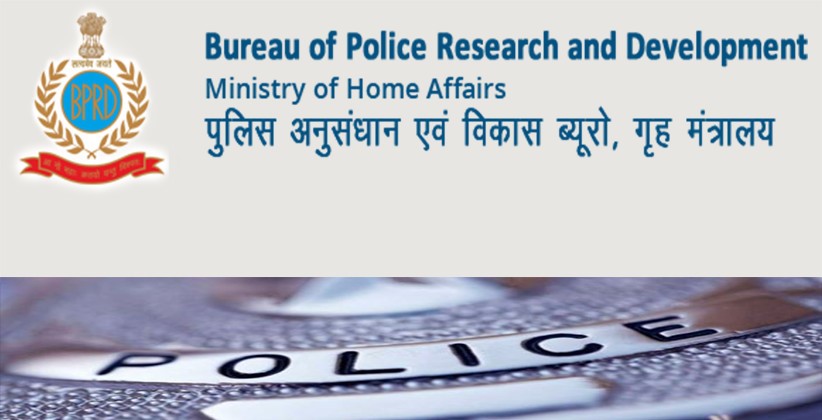
- 20 Jan 2024
Why is it in the News?
The Bureau of Police Research and Development (BPRD) has warned users of different scams perpetrated through messaging platform WhatsApp.
About the Bureau of Police Research and Development (BPRD):
- The Bureau of Police Research & Development (BPR&D) was set up in 1970 under the Ministry of Home Affairs to identify the needs and problems of the police in the country.
- It was also mandated to keep abreast of the latest developments in the fields of science and technology, both in India and abroad, to promote the use of appropriate technology in police work.
- Over the years, the BPR&D has also been entrusted with the responsibility of monitoring the training needs and quality of training in the States and Central Police Organisations and assisting the same, as also assisting the States in modernization of the State Police Forces and Correctional Administration.
- In the process, the BPR&D has also been tasked to assist the Ministry of Home Affairs and the CPFs, etc., in the development of Standards, Quality Requirements (QRs), etc., concerning various types of equipment and items about infrastructure.
- More recently, the BPR&D has also been entrusted with the responsibility of anchoring and coordinating the work of the National Police Mission.
BPRD's Roles and Responsibilities:
- The Bureau of Police Research and Development (BPRD) plays a crucial role in elevating the functioning of police forces across the nation:
- Policy Formulation and Guidance: Assists in formulating policies and strategies for police development.
- Guides to enhance the efficiency of police forces.
- Interdepartmental Interface: Acts as a bridge between the police and other government departments for efficient resource and technology sharing.
- Financial Assistance: Offers financial support to state governments for surveys, studies, and the development of specialized infrastructure and training.
- Training and Awareness: Conducts seminars and workshops to educate police personnel on crime prevention and effective policing.
- Promotes awareness of policing importance and public order maintenance.
- Development of Systems: Works towards developing systems like Community Policing, modern investigations, and effective technology and data management.
BPRD's Vision and Mission:
- Vision: To facilitate the optimal deployment of police forces and related activities, enabling them to meet contemporary challenges.
- Mission: To enhance police capabilities and those of stakeholders by providing resources and research-based knowledge, bridging gaps between evidence-based practice, policy formulation, and public outreach.
- Focus Areas: BPRD prioritizes innovation, knowledge initiatives, and research in policing, public order, security, and related fields, creating models relevant to contemporary needs.
- Overall Objective: BPRD is committed to developing capacity, fostering police professionalism, and promoting safety and public order in India through research, innovation, and strategic initiatives.
How the new Education Ministry guidelines will affect the coaching institutes (HT)
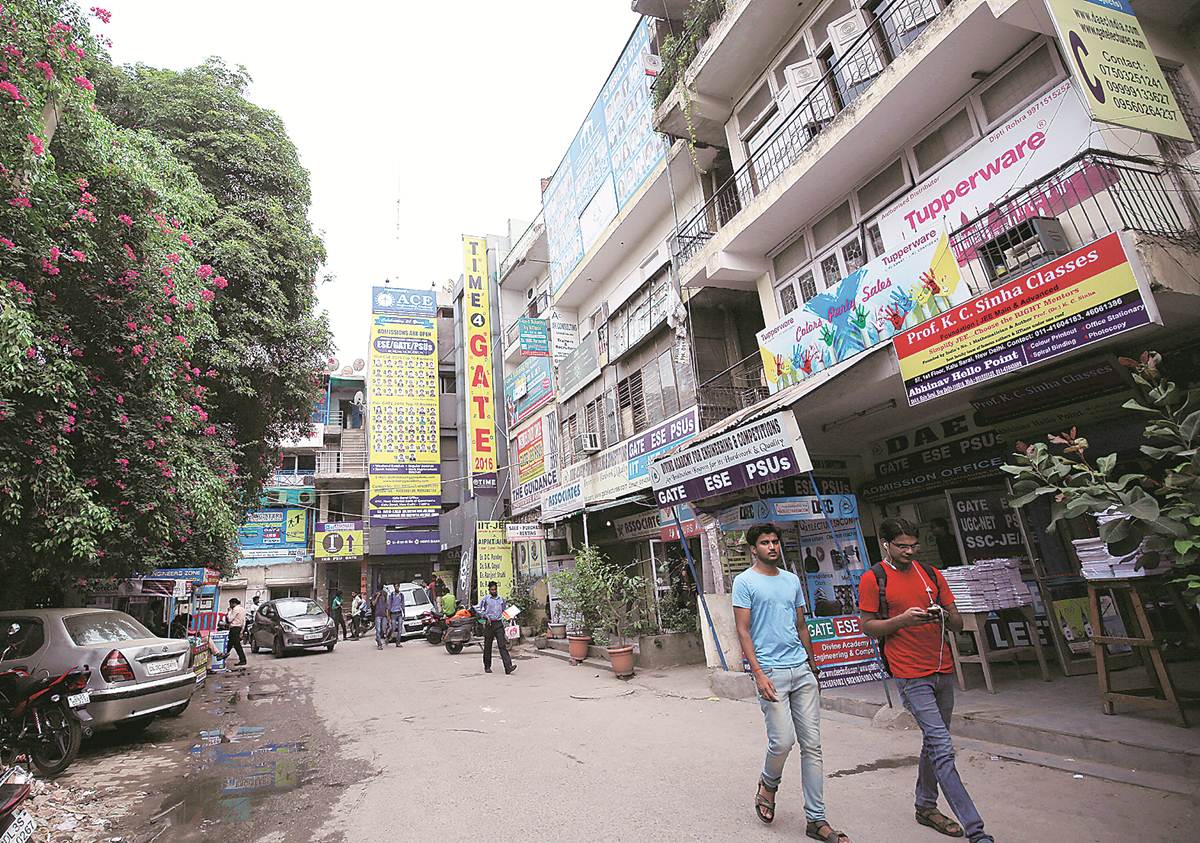
- 20 Jan 2024
Why is it in the News?
Taking cognisance of coaching centres charging exorbitant fees from students, promoting unhealthy competition and stress among students, and a rise in student suicides and other malpractices, a set of new guidelines were released by the Education Ministry.
Guidelines for Registration and Regulation of Coaching Centers 2024:
- The guidelines define a 'coaching centre' as an establishment providing coaching for study programs, competitive exams, or academic support to more than 50 students at the school, college, and university levels, established, run, or administered by any person.
Key aspects of the guidelines include:
- Registration Process: Coaching centres must apply for registration within their local jurisdiction, adhering to specified forms, fees, and document requirements.
- Each branch of a coaching centre is considered a separate entity, requiring individual registration.
- Marketing Standards: Coaching centres are prohibited from making misleading promises or guarantees regarding ranks or marks.
- Transparency is mandated, with centres required to maintain an updated website containing detailed information.
- Student Enrollment: Students below the age of 16 are not permitted for enrolment, and entry is allowed only after the completion of secondary school examinations.
- Fee Structure: Tuition fees must be fair, with detailed receipts provided.
- A comprehensive prospectus must include information on courses, duration, facilities, fees, and refund procedures. Any fee increase during the course is prohibited.
- Exit Policy: Pro-rata refunds are mandated within 10 days for mid-course withdrawals.
- Infrastructure Requirements: Coaching centres must allocate a minimum of one square meter per student.
- Compliance with fire safety and building codes is essential, along with proper electrification, ventilation, lighting, security measures, and medical assistance.
- Study Hours: Classes should not coincide with school hours, and weekly off for students and tutors is mandatory.
- Class sizes must align with a healthy teacher-student ratio.
- Mental Wellbeing: Centers should establish mechanisms for immediate intervention and counselling for students in distress.
- Complaint Mechanism: Students, parents, or tutors/employees can file complaints, to be resolved within thirty days by the competent authority or an inquiry committee.
- Penalties: Penalties for violations include ?25,000 for the first offence, ?1 lakh for the second, and registration revocation for subsequent breaches.
PM declares Khelo India Youth Games 2023 open in Chennai (Indian Express)

- 20 Jan 2024
Why is it in the News?
Prime Minister Narendra Modi recently declared the Khelo India Youth Games 2023 open at the Nehru Indoor Stadium in Chennai.
What is Khelo India?
- The Khelo India programme has been introduced to revive the sports culture in India at the grassroots level by building a strong framework for all sports played in our country and establishing India as a great sporting nation.
- Talented players identified in priority sports disciplines at various levels by the High-Powered Committee will be provided annual financial assistance of INR 5 lakh per annum for 8 years.
About the Khelo India Youth Games 2023:
- The 6th edition of the Khelo India Youth Games is being hosted by Tamil Nadu, marking the first occurrence of the Games in South India.
- Spanning from January 19th to 31st, 2024, the event will unfold across four cities in Tamil Nadu – Chennai, Madurai, Trichy, and Coimbatore.
- With over 5600 athletes participating in more than 275 competitive events spanning 26 sports disciplines and one demo sport, this edition introduces Silambam, a traditional sport of Tamil Nadu, as a demo sport and includes Squash for the first time.
- Archery, athletics, badminton, and squash have been introduced first time in this edition.
- The mascot, 'Veera Mangai,' pays tribute to Rani Velu Nachiyar, an Indian queen who courageously resisted British colonial rule.
- The logo integrates the image of the poet Thiruvalluvar.
- Objectives: The overarching objective of the Khelo India Youth Games is to rejuvenate India's grassroots sports culture, aiming to build a robust framework for all sports and position the nation as a prominent sporting entity.
- Organized by the Ministry of Youth Affairs & Sports, the Games have been an annual tradition since their inception in 2018 in Delhi.
What is the Nagara style, in which Ayodhya’s Ram temple is being built (Indian Express)
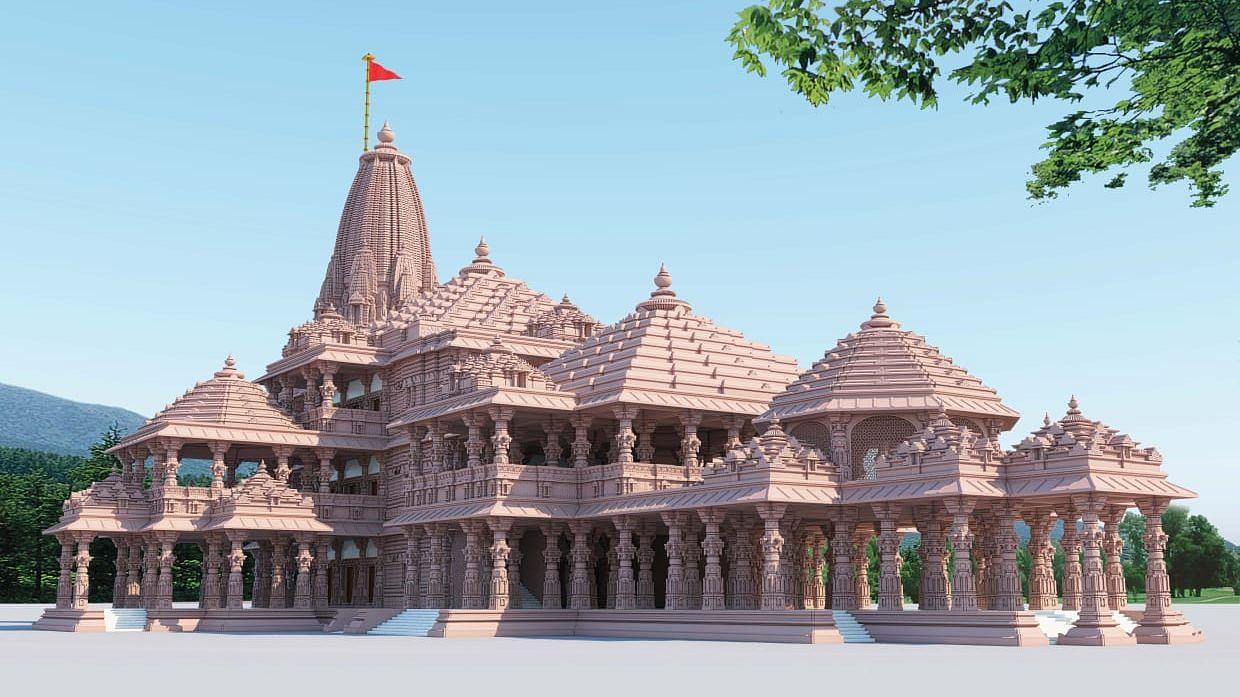
- 20 Jan 2024
Why is it in the News?
The Ram temple in Ayodhya will be inaugurated on January 22. Chandrakant Sompura, 81, and his son Ashish, 51, have designed the complex in the Nagara style of temple architecture.
What is the Nagara style?
- Originating around the 5th century AD, the Nagara style influenced temple architecture in several regions of India, from Northern India to Karnataka to parts of Madhya Pradesh, Odisha and Gujarat, giving it its pan-India appeal.
- Given that the temple will attract Hindu devotees from across the country, this is the most "inclusive" architectural style of Hinduism in that respect.
- The word “Nagara” means “city,” and the style's close association with urban architectural principles made it suitable for a bustling town like Ayodhya while retaining Hindu temple elements that are familiar to devotees.
- With carved pillars and towering spires, it seeks to echo the magnificent craftsmanship of the Khajuraho temples of Madhya Pradesh and the Sun Temple in Odisha’s Konark.
- The Nagara style is not confined to a specific period — it flourished during the Gupta dynasty but continued to evolve through various regional kingdoms and empires that ruled over the northern parts of India.
- The temple's architecture is characterised by its tower-like structures, known as 'shikhara' or spires, which rise vertically, symbolising the sacred mountain, Mount Meru, considered to be the centre of the physical, metaphysical and spiritual dimensions in Hindu, Jain and Buddhist cosmology.
- This temple architecture is also closely associated with both the Shaivite and Vaishnavite sects of Hinduism and known for its sculptural elements that echo scenes from Hindu epics like Ramayana and Mahabharata.
The typical Nagara temple layout:
- The layout of Nagara-style temples follows a distinct pattern, reflecting the cosmic order and the journey of the soul towards liberation
The typical plan of the Nagara-style temple:
- Vastu Purusha Mandala: At the core of Nagara temple design is the concept of Vastu Purusha Mandala, a sacred diagram representing the cosmic man.
- The temple’s plan is aligned with this mandala, ensuring that the deity’s sanctum aligns with the cosmic forces.
- This alignment reflects the belief that the temple is a microcosm of the universe, establishing a cosmic resonance.
- Garbhagriha (Sanctum Sanctorum): The sanctum sanctorum, or garbhagriha, is the innermost and holiest chamber where the principal deity resides and is always located directly below the highest Sikhara.
- Often square, this chamber is a symbol of the womb of creation.
- The placement of the deity within this sacred space is meticulously calculated to maintain harmony with cosmic energies.
- Pradakshina Patha (Circumambulation): Around the garbhagriha, there is a circumambulatory path called the pradakshina patha.
- This path allows devotees to walk in a clockwise direction around the deity, as a symbolic act of paying respect, seeking blessings, and expressing devotion.
- The pradakshina patha may be enclosed within the temple or form an outer pathway surrounding the main temple complex.
- It is believed that circumambulation harmonizes the individual with the divine and creates a spiritual connection.
- Vimana (Tower): The Vimana, or tower, is the crowning glory of Nagara temples.
- The shikhara, as the main spire, represents Mount Meru, the mythical abode of the gods, meant to symbolize the ascent from the earthly realm to the celestial plane, creating a visual narrative of the soul’s journey towards spiritual awakening.
- Mandapa (Congregation Hall): The mandapa, or congregation hall, serves as a communal space for rituals, gatherings, and celebrations. Supported by intricately carved pillars, the mandapa’s design is often open, allowing devotees to participate in ceremonies.
- The pillars themselves are adorned with sculptures depicting deities, mythological narratives, and celestial beings, contributing to the immersive spiritual experience.
- Antarala (Vestibule): The antarala acts as a transitional space between the garbhagriha and the mandapa.
- It serves functional and symbolic purposes, symbolising the journey from the material to the divine.
- The antarala may house additional deities or intricate sculptures, further enhancing the spiritual ambience.
- Ardhamandapa (Entrance Porch): The ardhamandapa, or entrance porch, serves as the threshold between the external world and the sacred interior.
- Often featuring ornate pillars and intricate carvings, the ardhamandapa is a visual prelude to the architectural splendour within.
- Devotees traverse this space as they enter the sanctified realm of the temple.
- Peripheral Structures: Surrounding the central shrine are often smaller shrines and subsidiary structures, creating a complex architectural ensemble.
- These structures, known as subsidiary shrines or parivara devatas, pay homage to various deities associated with the main deity.
- The arrangement of these structures follows a harmonious pattern, contributing to the overall visual appeal of the temple complex.
Regional variations:
- As a pan-India style, the Nagara architecture has regional variations that reflect the cultural ethos of where it is built.
- Odisha: The Nagara style in the state is characterised by its exquisite stone carvings and towering spires.
- The temples of Bhubaneswar, Puri, and Konark in the state of Odisha exemplify this style.
- The temples showcase carvings of deities, mythical creatures, dancers, and musicians, evoking a sense of dynamic movement.
- Gujarat: Known for its elegance and simplicity, the Gujarati Nagara style is epitomised by the Sun Temple in Modhera and the famous Somnath Temple.
- The main 'shikhara' in the state's temples are relatively modest in height compared to northern iterations.
- The emphasis is on the overall harmony of the temple’s complex measurements and the sculptural beauty.
- Rajasthan: The style in this state has been noticeably influenced by distinctive elements of Rajput architecture — from fortified walls and ornate entryways.
- Look no further than the Dilwara Temples in Mount Abu and the Sun Temple of Ranakpur for examples of this style.
- Distinct features include marble carvings and delicate detailing.
- Karnataka: Nagara temples in the South have subdued shikharas compared to their northern temples.
- What is more, the emphasis is on pillar carvings and the subject matter is often famous scenes from mythology.
- The Virupaksha Temple in Hampi and the Lepakshi Veerabhadra Temple are notable Nagara-style temples in the south.
- Madhya Pradesh: Central Indian temples often feature a variety of spires, emphasising the stepped shape.
- The sculptures focus on a wide range of themes, including mythological narratives, daily life, and spiritual pursuits.
- The Khajuraho complex, including the Lakshmana Temple, exemplifies the Nagara style in Central India.
- Combining spiritual principles with aesthetics and craftsmanship, the Nagara style is an indelible part of India’s cultural and religious legacy.
- The Ram temple draws from this same architectural legacy of Hinduism to create a religious monument that seeks to inspire the same awe that the centuries-old Indian temples continue to do.
Comparison to Dravida style:
- The Dravida counterpart to the shikhara is the vimana. There exists, however, a fundamental difference.
- In the Dravida-style temples, vimanas are typically smaller than the great gatehouses or gopurams, which are the most immediately striking architectural elements in a temple complex.
- Moreover, while shikharas are mentioned in southern Indian architectural sources, they refer to only the dome-shaped crowning cap atop the vimana.
- The existence of gopurams also points to another unique feature of the Dravida style — the presence of a boundary wall.
- A few Nagara-style temple complexes are lined with distinctive boundary walls that are a part of the temple’s design.
- This is one of Ayodhya’s Ram temple’s ‘hybrid’ features — although no elaborate gopuram has been built (citing paucity of space), a 732m long wall runs around the temple compound.
ISRO develops second-generation Distress Alert Transmitter (The Hindu)
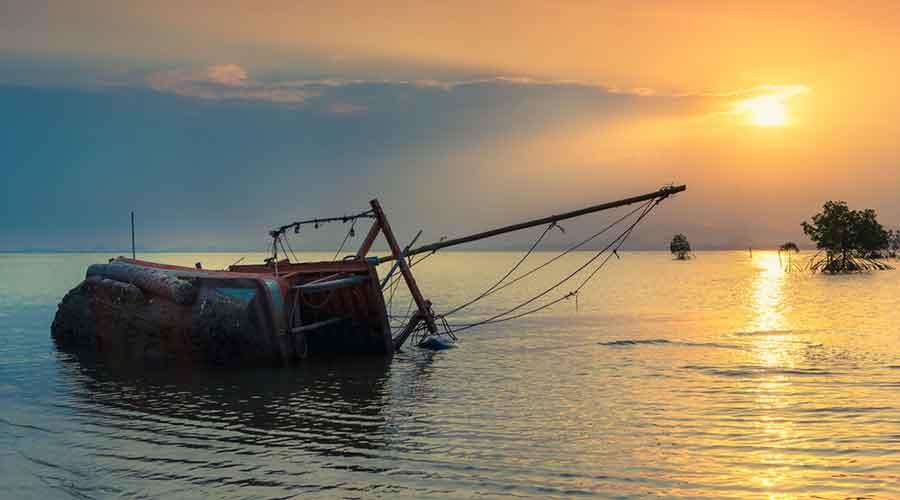
- 19 Jan 2024
Why is it in the News?
Indian Space Research Organisation (ISRO) has developed an improvised Distress Alert Transmitter (DAT) with advanced capabilities and features for the fishermen at sea to send emergency messages from fishing boats.
What is a Distress Alert Transmitter (DAT)?
- The first version of DAT has been in operation since 2010, allowing fishermen at sea to send emergency messages from their fishing boats.
- These messages are transmitted via a communication satellite to the Indian Mission Control Centre (INMCC), the central control station, where the alert signals are decoded to determine the identity and location of the distressed fishing boat.
- The extracted information is then relayed to Maritime Rescue Coordination Centres (MRCCs) under the Indian Coast Guard (ICG), enabling coordinated Search and Rescue operations to assist fishermen in distress.
About the Second Generation DAT (DAT-SG):
- Leveraging advancements in satellite communication and navigation technology, ISRO has enhanced DAT into the Second Generation DAT (DAT-SG). DAT-SG not only allows fishermen to send distress alerts but also provides them with acknowledgements, assuring them that rescue operations are underway.
- In addition to transmitting distress signals, DAT-SG can receive messages from control centres.
- This feature enables the sending of advance alert messages to fishermen about adverse weather conditions, cyclones, tsunamis, or other emergencies.
- Moreover, the system transmits information on Potential Fishing Zones (PFZs) to fishermen at regular intervals.
- DAT-SG can be connected to mobile phones using a Bluetooth interface, and messages can be read in the native language through a mobile app.
- The central control centre employs a web-based network management system called "SAGARMITRA," which maintains a database of registered DAT-SGs.
- This system assists MRCCs in accessing real-time information about distressed boats, allowing the Indian Coast Guard to initiate Search & Rescue operations promptly during distress situations.
National Quantum Mission to call for proposals to set up four tech hubs (PTI)

- 19 Jan 2024
Why is it in the News?
The government will set up a coordination cell to implement the National Quantum Mission (NQM) with a focus on establishing four technology hubs in the format of consortia of academia, research and development labs and industry.
What is the National Quantum Mission (NQM)?
- The National Quantum Mission (NQM) will assist India take a giant leap into the future of technology.
- India has entered the ranks of the select few nations actively pursuing the advancement of quantum technology by establishing this programme.
- In 2023, the government sanctioned the National Quantum Mission (NQM), spanning from 2023-24 to 2030-31, with the following key features:
- The mission aims to initiate, foster, and amplify scientific and industrial research and development in Quantum Technology (QT), establishing a dynamic and innovative ecosystem.
- Its ultimate goal is to propel quantum technology-led economic growth, foster the QT ecosystem, and position India as a leading nation in the field of Quantum Technologies & Applications.
- It willl be implemented by the Department of Science & Technology (DST) under the Ministry of Science & Technology.
Key Objectives:
- Develop intermediate-scale quantum computers with 50-1000 physical qubits across platforms like superconducting and photonic technology within eight years.
- Implement satellite-based secure quantum communications over a 2000-kilometre range within India, ensuring long-distance secure quantum communications with other countries.
- Establish inter-city quantum key distribution over 2000 km and multi-node Quantum networks with quantum memories.
- Develop highly sensitive magnetometers in atomic systems and Atomic Clocks for precision timing, communications, and navigation.
- Support the design and synthesis of quantum materials like superconductors, novel semiconductor structures, and topological materials for quantum device fabrication.
- Develop single photon sources/detectors and entangled photon sources for applications in quantum communications, sensing, and metrology.
Implementation:
- The mission involves the establishment of four Thematic Hubs (T-Hubs) in leading academic and National R&D institutes, focusing on Quantum Computing, Quantum Communication, Quantum Sensing & Metrology, and Quantum Materials & Devices.
- These hubs will concentrate on generating new knowledge through basic and applied research and promote R&D in their respective domains.
Significance:
- NQM has the potential to elevate India's Technology Development ecosystem to global competitiveness.
- It is expected to significantly benefit various sectors such as communication, health, finance, and energy, with applications ranging from drug design to space, banking, and security.
- The mission aligns with national priorities, including Digital India, Make in India, Skill India, Stand-up India, and Start-up India, and contributes to Sustainable Development Goals (SDG).
- With the launch of this mission, India will be the seventh country to have a dedicated quantum mission after the US, Austria, Finland, France, Canada and China.
What is Quantum Technology?
- The term "quantum technology" is used to describe the research and development of techniques to build supercomputers with enhanced speed, security, and efficiency in data processing above conventional computers.
- Quantum mechanics, which governs the behaviour of subatomic particles, is used to design these novel systems.
- The peculiar characteristics of subatomic particles are the key to quantum technology's capabilities in processing massive quantities of information concurrently.
Telco body seeks USOF, tax reliefs in FY25 Union Budget (Live Mint)
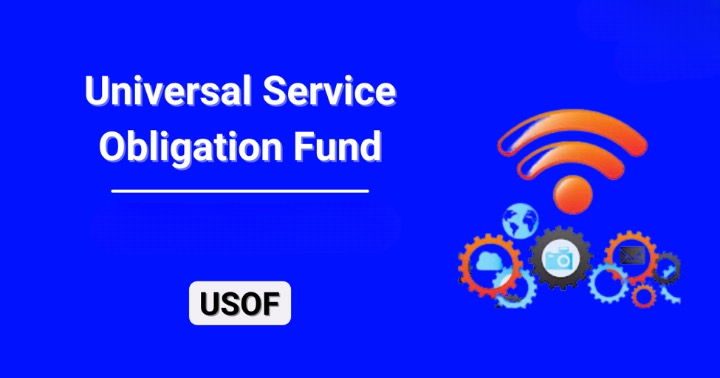
- 19 Jan 2024
Why is it in the News?
Telecom services providers have urged the Ministry of Finance to suspend the Universal Service Obligation Fund (USOF) till the existing corpus is exhausted.
About Universal Service Obligation Fund (USOF):
- The USOF was established through a parliamentary amendment to the Indian Telegraph (Amendment) Act, 2003.
- Its primary goal is to ensure non-discriminatory access to affordable telecom services in rural and remote areas, thereby narrowing the digital gap between urban and rural regions.
- For financially unviable rural and remote areas, the USOF provides subsidy support in the form of Net Cost or Viability Gap Funding (VGF).
- This encourages telecom service providers to expand their services to these areas, enhancing telecommunications and broadband accessibility.
- Funding Mechanism: Telecom operators contribute to the USOF through a Universal Service Levy (USL), a percentage of their Adjusted Gross Revenue (AGR).
- Administration: The USOF is overseen by the Administrator, USO Fund, appointed by the Central Government.
- It operates as an attached office under the Department of Telecommunications (DoT), Ministry of Communications.
Telecom Technology Development Fund (TTDF):
- Launched by USOF on October 1st, 2022, the TTDF Scheme targets domestic companies and institutions engaged in designing, developing, and commercializing telecommunication products and solutions.
- The scheme aims to facilitate affordable broadband and mobile services in rural and remote areas.
- The initiative fosters connections between schools and diverse volunteers from the Indian Diaspora, including young professionals, retired teachers, retired government officials, NGOs, private sector companies, corporate institutions, and more.
- Under the scheme, USOF is committed to developing standards to meet nationwide requirements and establishing an ecosystem for research, design, prototyping, use cases, pilots, and proof-of-concept testing.
- The scheme provides grants to Indian entities, encouraging the integration of indigenous technologies tailored to domestic needs.
Cellular Operators Association of India (COAI)
- The Cellular Operators Association of India (COAI), was constituted in 1995 as a non-governmental society registered under the Societies Act, 1860.
- The Association is dedicated to the advancement of modern communications through the establishment of a world-class cellular infrastructure and to delivering the benefits of affordable mobile communication services to the people of India.
- Today it is regarded as an important interface between the main stakeholders of the Indian Telecom Ecosystem, i.e. Government, Operators, Consumers, Equipment Manufacturers, and Content Providers.
- COAI provides a forum for discussions and exchange of ideas between Service Providers, Policy Makers, Regulators, Technologists, etc., who share a common interest in the development of mobile telephony in the country.
India’s first graphene centre becomes reality (Indian Express)
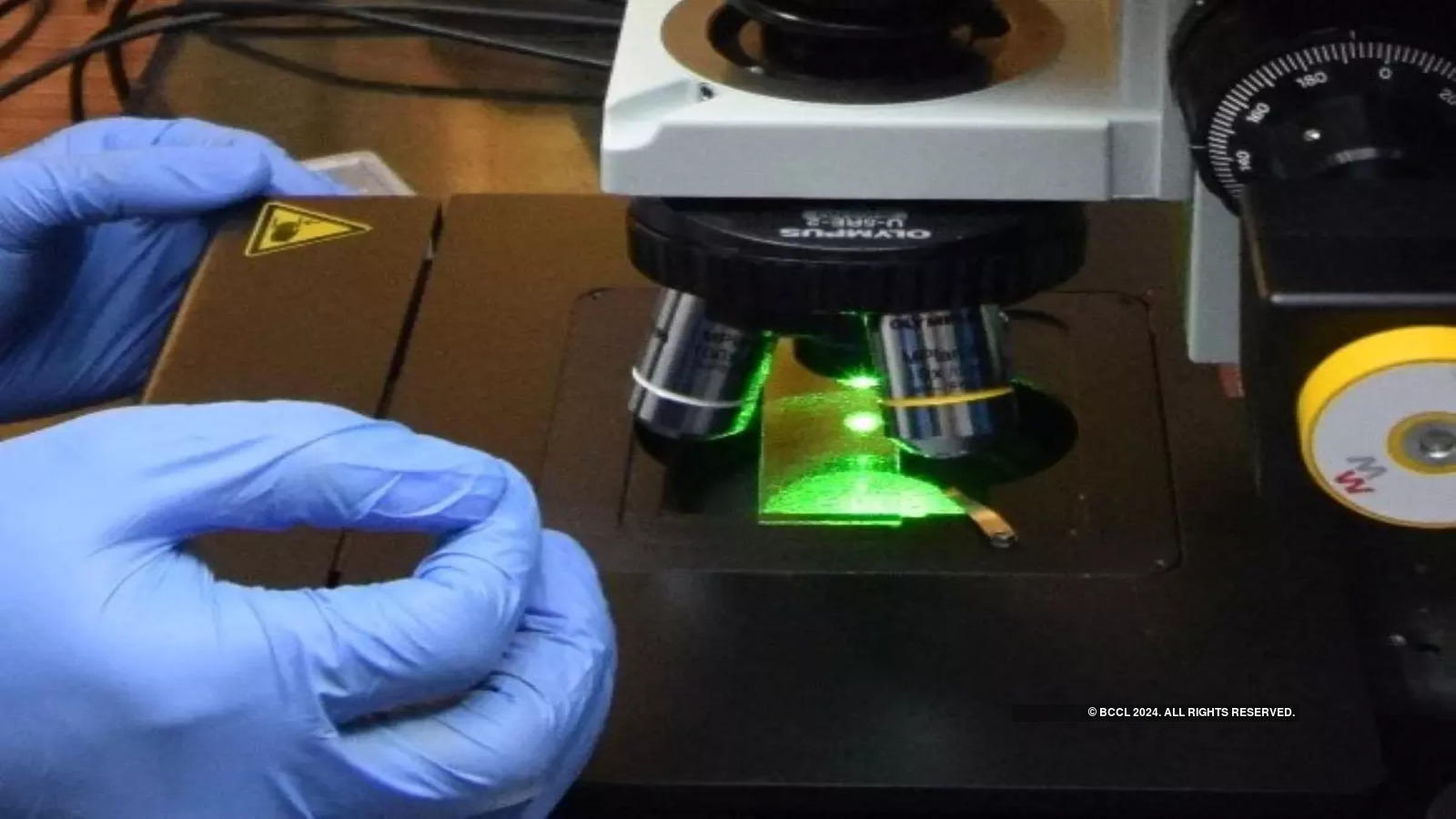
- 18 Jan 2024
Why is it in the News?
The Union government recently launched India’s first graphene centre ‘India Innovation Centre for Graphene (IICG)’ at Maker Village Kochi.
About India Innovation Centre for Graphene (IICG):
- India Innovation Centre for Graphene (IICG) is India’s first Graphene Centre.
- It is a joint venture of the Digital University of Kerala, the Centre for Materials for Electronics Technology (C-MET) and Tata Steel Limited.
- Key Aspects: IICG is committed to advancing research and development, fostering product innovation, and enhancing capacity building in the field of Graphene and two-dimensional materials (2DM).
- With a vision to bridge the gap between research and commercialization, IICG actively supports the Graphene-Aurora program initiated by the Ministry of Electronics and Information Technology (MeitY).
- This program aims to provide a comprehensive facility for startups and industries to facilitate seamless progression from research and development to commercialization.
About Graphene:
- Graphene is a one-atom-thick layer of carbon atoms arranged in a hexagonal lattice, serves as the fundamental building block of Graphite, utilized in various applications, including pencil tips.
- Scientists first isolated Graphene in 2004.
Properties of Graphene:
- Recognized as the world's thinnest material, Graphene boasts a thickness of only one atom, making it one million times thinner than human hair.
- Despite its extreme thinness, Graphene exhibits exceptional strength, surpassing even steel and diamond.
- It functions as an outstanding conductor of both heat and electricity, surpassing copper in electrical conductivity.
- Remarkably transparent, Graphene absorbs only 2% of light.
- Impermeable to gases, including lightweight gases like hydrogen and helium.
Applications:
- Mechanical Strength: Used to enhance the strength of various materials.
- Thermal Applications: Ideal for creating heat-spreading solutions, such as heat sinks or heat dissipation films.
- This has applications in microelectronics (e.g., improving the efficiency and lifespan of LED lighting) and larger applications like thermal foils for mobile devices.
- Energy Storage: Due to its minimal thickness, Graphene possesses an exceptionally high surface-area-to-volume ratio, making it promising for use in batteries and supercapacitors.
- It holds the potential to enable energy storage devices, including batteries, supercapacitors, and fuel cells, with increased energy storage capacity and faster charging capabilities.
- Future Potential: Graphene shows promise in various potential applications, including anti-corrosion coatings and paints, precise sensors, efficient electronics, flexible displays, solar panels, accelerated DNA sequencing, drug delivery systems, and more.
Telangana signs agreement with WEF for setting up C4IR in Hyderabad (The Hindu)

- 18 Jan 2024
Why is it in the News?
Recently, Telangana has signed an agreement with the World Economic Forum (WEF) to establish the Centre for Fourth Industrial Revolution (C4IR) in the state capital, Hyderabad.
About the Centre for Fourth Industrial Revolution (C4IR):
- C4IR is a global initiative of the World Economic Forum (WEF) to collaborate with governments, businesses, academia, and civil society to address the challenges and opportunities posed by the Fourth Industrial Revolution (4IR).
- The focus of this collaboration is to use technology for advancements in the life sciences and healthcare sector, particularly aiming to meet healthcare targets for the state’s population.
- Telangana aims to become a hub for health technology and a global centre for healthcare services.
About Fourth Industrial Revolution (4IR):
- Klaus Schwab, the executive chairperson of the World Economic Forum (WEF), coined the term 4IR in 2016.
- This term refers to advancements in artificial intelligence, machine learning, 5G technology, the Internet of Things, robotics, biotechnology, quantum computing, and more.
- These technologies offer new possibilities for organizations, allowing them to dream big and expand into areas that were previously unimaginable.
The World Economic Forum
- The World Economic Forum is the International Organization for Public-Private Cooperation.
- The Forum engages the foremost political, business, cultural and other leaders of society to shape global, regional and industry agendas.
- It was established in 1971 by German engineer and economist Klaus Schwab.
- It is a not-for-profit foundation and is headquartered in Geneva, Switzerland.
- The Forum strives in all its efforts to demonstrate entrepreneurship in the global public interest while upholding the highest standards of governance.
Jagannath Temple corridor | An attempt to counter BJP’s Hindutva push ahead of elections (The Hindu)
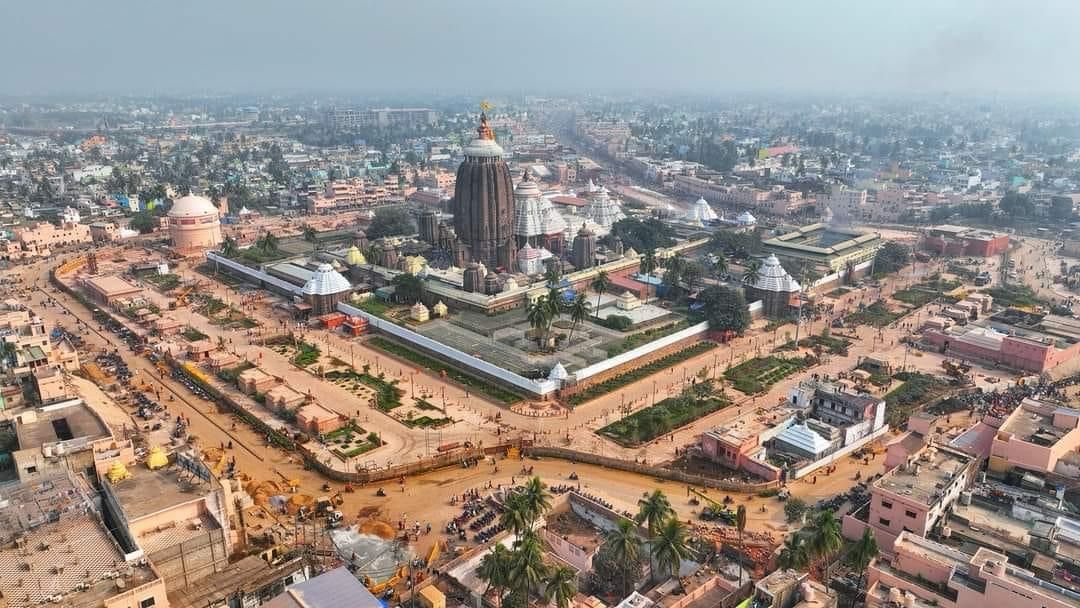
- 18 Jan 2024
Why is it in the News?
Odisha Chief Minister Naveen Patnaik on Wednesday unveiled a sprawling heritage corridor around the Jagannath Temple in Puri, a project being seen as an attempt to counter the BJP’s Hindutva push ahead of the Lok Sabha and State Assembly elections later this year.
About the Puri Heritage Corridor Project:
- The Shree Jagannath Heritage Corridor, officially named Shree Mandir Parikrama, is a 75-metre-long heritage corridor around the Jagannath Temple in Puri, Odisha.
- Initiated in 2016, the Puri Heritage Corridor Project aims to enhance pilgrim amenities, bolster the temple's safety, and contribute to Puri's transformation into a world heritage city.
- The comprehensive project entails the redevelopment of significant areas within the town and in proximity to the temple, catering to the needs of both visitors and tourists.
- A phased implementation of 22 distinct projects is planned under the Augmentation of Basic Amenities and Development of Heritage and Architecture at Puri (ABADHA) scheme.
- The project also aims to provide ample facilities and amenities for pilgrims and visitors, ensuring a hassle-free and memorable experience, while strengthening the safety and security of the temple and its devotees.
About Jagannath Temple:
- Jagannath Temple believed to be built in the 12th century by King Anatavarman Chodaganga Deva of the Eastern Ganga Dynasty.
- People call it ‘Yamanika Tirtha’ because they believe that the presence of Lord Jagannath nullifies the power of ‘Yama,’ the god of death, in Puri.
- The temple, also known as the “White Pagoda” and part of the Char Dham pilgrimages, has four gates:
- The main Eastern ‘Singhdwara’ with two crouching lions,
- Southern ‘Ashwadwara,’
- Western 'Vyaghra Dwara,' and
- Northern ‘Hastidwara.’
- Each gate has unique carvings representing different forms.
- In front of the entrance stands the Aruna stambha or sun pillar, originally from the Sun Temple in Konark, adding to the historical and artistic significance of the Jagannath Temple.
An ancient system that could bring water to dry areas (DownToEarth)
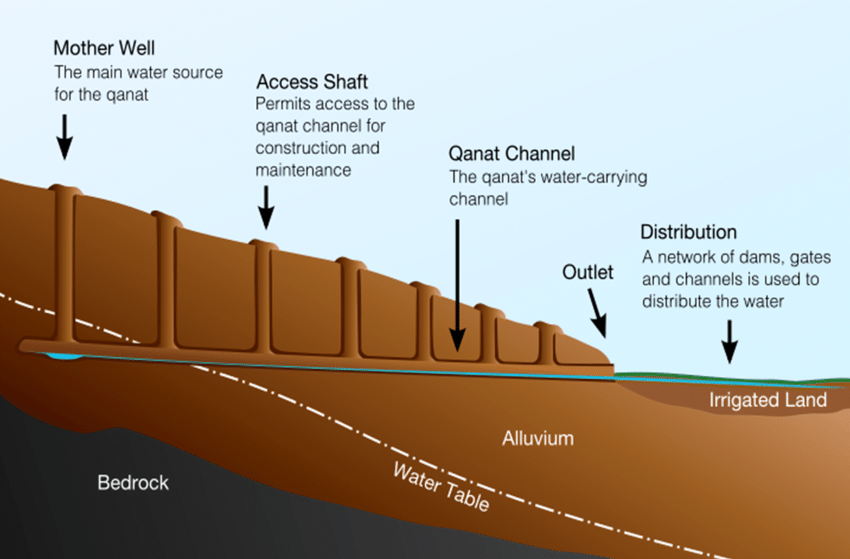
- 18 Jan 2024
Why is it in the News?
Some of Africa’s dry areas face serious water shortages due to minimal rainfall. An ancient system of drawing water from aquifers, the “qanat system”, could help.
What is the Qanat system?
- The qanats have been used for centuries in arid and semi-arid parts of North Africa, the Middle East and Asia, where water supplies are limited.
- It’s known by a variety of names, “foggara” in North Africa, “falaj” in Oman and “qarez” in parts of Asia.
- It’s thought to have been developed in Persia in the first millennium BC.
- As the Islamic Empire spread across the Arabian Peninsula, the Levant, north Africa and parts of Europe from 661 to 750 CE, so did knowledge about qanats.
- Today, some of the region’s qanat systems, like those in Iran, are protected under heritage status.
- Some of these qanats, although declining in number, are still used.
- They are largely protected for historical and cultural reasons.
How does the qanat system work?
- There are bodies of water underground known as aquifers, some of which can be found at the tops of valleys or near mountains.
- A qanat system taps these aquifers and, using underground tunnels, moves the water, using gravity, over many kilometres.
- The tunnel then exits at a lower-lying area.
- When the water exits the tunnel, farmers can use it to irrigate their crops.
- People can also access the water along the stretch of the tunnel using wells.
- It’s a system that’s managed by everyone and its benefits are shared.
- Everybody has a vested interest and a role to play and community bonds can be strengthened.
Advantages of qanat systems:
- Efficient use of water: Qanats allow for the extraction and transport of groundwater from deep underground sources to the surface.
- This allows for a more efficient use of water resources, as the water is extracted and transported to the surface for irrigation and other purposes.
- Sustainable water supply: Qanats can provide a reliable and sustainable source of water for communities, even in arid regions where surface water is scarce.
- Cool and humid air supply: The cool and humid air that flows through the qanat can be used to provide a natural air conditioning system for buildings, as well as to irrigate crops and orchards.
- Low maintenance: Qanats require minimal maintenance once they are constructed, making them a cost-effective and long-lasting water supply solution.
- Disaster resilience: Qanats are resilient to natural disasters such as earthquakes and floods, as they are located underground and protected from damage.
Who are the Shankaracharyas — and who was Adi Shankara? (Indian Express)
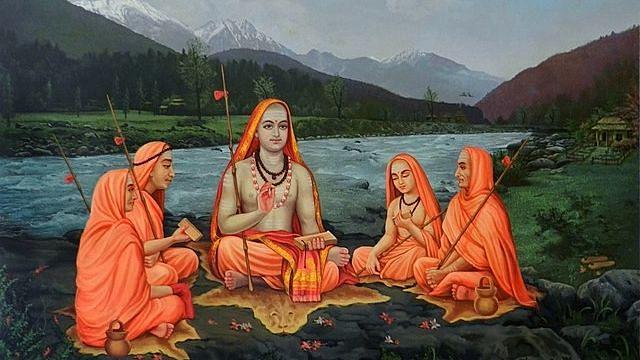
- 18 Jan 2024
Why is it in the News?
Recently, the four Shankaracharyas have said they will not attend the inauguration of the Ram temple in Ayodhya on January 22.
Who are the Shankaracharyas?
- The Shankaracharyas are the "supreme authority" in Hinduism and for interpreting Hindu scriptures.
- The shankaracharyas head the four principal monasteries or mutts that were established by the eighth-century Hindu saint Adi Shankara.
- They are based in Uttarakhand, Odisha, Karnataka and Gujarat.
- Each mutt, called peetha or pitha in Sanskrit, was tasked to serve as the custodian of one Veda each and keep alive Vedic literature.
- Govardhan Math in Puri is the custodian of the Rig Veda.
- Dwarka Sharada Peetham in Gujarat is responsible for the Sam Veda.
- The Sringeri Sharada Peetham in Karnataka is responsible for the Yajur Veda and
- Jyotir Math in Uttarakhand's Joshimath for the Atharva Veda.
- All the peethas are situated in the four cardinal directions and are amongst the most-revered pilgrimages in India.
Who was Adi Shankara?
- The title "Shankaracharya", in fact, is derived from Adi Shankara, a Vedic scholar credited with reforming and reviving Hinduism during a time when Buddhists and Jains wielded influence.
- Adi Shankara was born in Kalady village on the bank of the River Periyar in today Kerala’s Ernakulam district in the month of Vaishakha in 788 CE.
- Also known as Jagadguru, Shankara had a short life (it is believed he died when he was just 32) but he had a big impact on Hindu religion.
- Revered as an avatar of Lord Shiva, it is believed that he mastered the Vedas when he was just 16.
- At a very young age, Shankara started criss-crossing the length and breadth of India to spread his commentaries on Brahama Sutras, Upanishads and the Bhagavad Gita amid a rise in Jainism and Buddhism.
What is the legacy of Shankara?
- Shankara’s legacy today transcends his contributions to metaphysics and theology.
- His travels across the subcontinent have often been interpreted as a near-nationalistic project where faith, philosophy and geography are yoked together to imagine a Hindu India which transcended the political boundaries of his time.
- And his four mathas, located in the North and South, East and West of India, are seen as the ultimate examples of this project.
- His mathas are thus also seen as keepers of Hindu faith and traditions.
What is Advaita Vedanta?
- Shankara is most associated with Advaita Vedanta, a school of Hindu philosophy and spiritual discipline.
- Advaita Vedanta articulates an ontological position of radical nondualism — it posits that all that we perceive is ultimately illusory (maya) and that the principle of Brahman (not the caste Brahmin) is the only true reality of all things, transcending empirical plurality.
- The fundamental thrust of Advaita Vedanta lies in the unity of atman or individual consciousness, and brahman or the ultimate reality.
Four Peethas aren't the four Dhams
- The four peethas established by Adi Shankara should not be confused with the four dhams.
- The four dhams, known as Char Dham, were also established by Adi Shankara.
- The four dhams are at;
- Badrinath
- Dwarka
- Puri and
- Rameswaram.
- The peethas are basically associated with the preservation and propagation of Hindu philosophy.
India signs an agreement to acquire five lithium mines in Argentina (Business Standard)
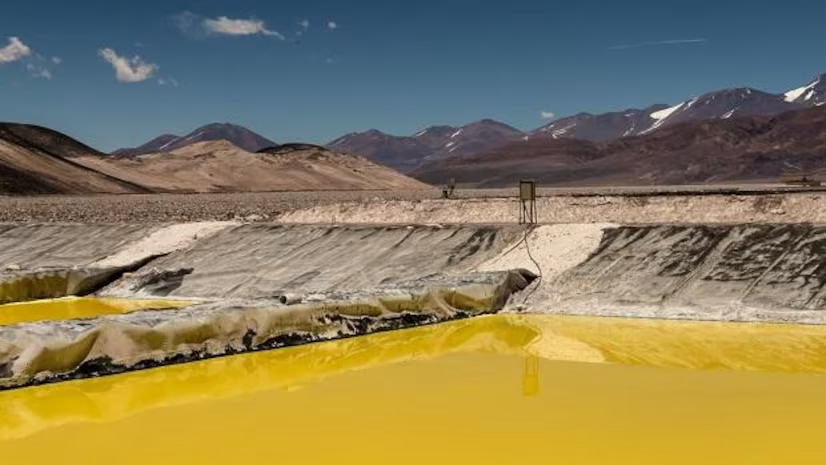
- 17 Jan 2024
Why is it in the News?
Recently the Indian govt. signed an agreement to acquire five lithium brine blocks for exploration and development in Argentina.
Context:
- The Mines Ministry, operating through KhanijBidesh India Limited (KABIL), has entered into an agreement with Argentina's state-owned CAMYEN for the development of five lithium blocks.
- CAMYEN, officially known as Catamarca Minera Y Energetica Sociedad Del Estado, is headquartered in the Catamarca province of the Latin American nation.
- Key Points: KABIL, a government-owned entity, will initiate the exploration and development activities for five lithium brine blocks—Cortadera-I, Cortadera-VII, Cortadera-VIII, Cateo-2022-01810132, and Cortadera-VI, collectively spanning an area of approximately 15,703 hectares.
- As part of its expansion, KABIL is planning to establish a branch office in Catamarca, Argentina.
- This marks a significant milestone as it represents the first lithium exploration and mining project undertaken by a government company in India.
- Argentina, situated within the global "Lithium Triangle" alongside Chile and Bolivia, collectively possesses more than half of the world's total lithium resources.
Khanij Bidesh India Ltd. (KABIL):
- It is a Joint Venture Company among National Aluminium Company (NALCO), Hindustan Copper Limited (HCL) and Mineral Exploration Corporation Limited (MECL).
- It has been formed in August 2019.
- KABIL is focusing on identifying and sourcing battery minerals like Lithium and Cobalt.
- KABIL is a joint venture company focused on identifying, acquiring, developing, processing and making commercial use of strategic minerals in overseas locations for supply in India.
Current Statistics About Lithium in India:
- India has recently discovered 5.9 million tonnes of lithium reserves in Jammu & Kashmir and ranks seventh globally.
- The primary lithium reserve in India has been discovered in the Salal-Haimana area of Reasi District in Jammu and Kashmir, with additional smaller reserves identified in Karnataka.
- Presently, India fulfils its entire lithium demand through imports.
- In the fiscal year 2023, there was a notable increase in lithium imports in India, reaching approximately $3 billion (around ?24,900 crore), indicating a 58% growth compared to the figures in FY22.
- More than 95% of India's lithium imports are sourced from China and Hong Kong.
Global Reserves of Lithium:
- Approximately half of the world's lithium resources are concentrated in Latin America, primarily in countries such as Bolivia, Argentina and Chile along with significant deposits in USA, Australia and China.
- Bolivia has the highest identified lithium resources in the world with 20 million tonnes, as per the US Geological Survey data.
- Argentina has the second-largest lithium reserve estimated to be close to 20 million tonnes.
- The United States follows Argentina with 12 million tonnes of lithium reserves.
- Chile ranks fourth globally with 11 million tonnes of lithium reserves.
- Australia occupies the fifth spot with 7.9 million tonnes of lithium reserves, according to the available data.
- China, the largest country in Asia, ranks sixth globally with 6.8 million tonnes of lithium reserve. China, without having the largest lithium reserves, continues to dominate lithium mining and processing in the world.
- Argentina holds a substantial portion, accounting for 20% of the world's total lithium resources, making it the second-largest contributor after Bolivia.
- Argentina is a key participant in the 'Lithium Triangle,' alongside Chile and Bolivia.
- Collectively, these three nations possess over two-thirds of the global lithium resources.
- The Lithium Triangle is a region in the Andes known for its rich lithium reserves.
- Notably, Argentina ranks second globally in terms of lithium resources, third in lithium reserves, and fourth in lithium production.
Importance of the Agreement:
- This agreement holds strategic value as it enables India to enhance its lithium supply, fostering the growth of both countries' lithium mining and downstream sectors.
- It contributes to the diversification of the supply chain for essential materials, aligning with the pursuit of Global Net Zero objectives.
- Given that a significant portion, approximately 54%, of India's lithium imports are currently sourced from China, which dominates 80% of the global supply, this deal helps reduce dependence on a single supplier.
- The initiative aligns with the Mineral Security Partnership (MSP), of which India is an active participant.
Union Minister Rao Inderjit Singh launches the MPLADS e-SAKSHI Mobile Application for the Revised Fund Flow Procedure under the MPLAD Scheme (PIB)
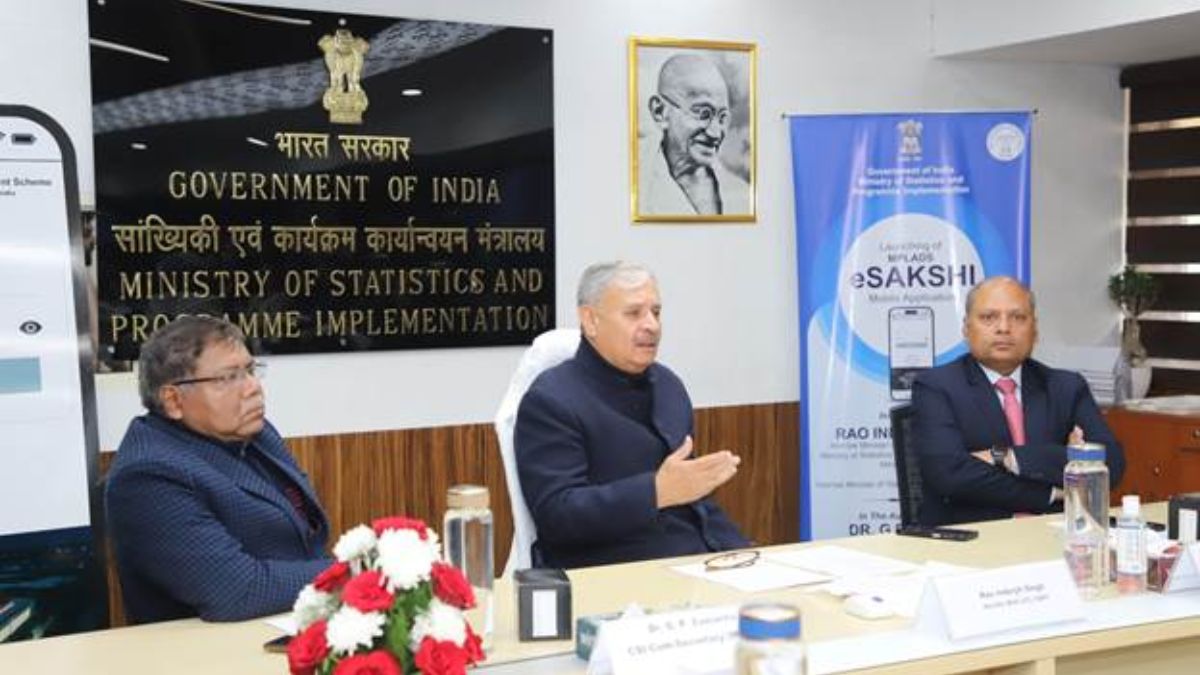
- 17 Jan 2024
Why is it in the News?
Recently, the Minister of State (Independent Charge) of the Ministry of Statistics and Programme Implementation (MoSPI) Rao Inderjit Singh launched the MPLADS e-SAKSHI Mobile Application at Khurshid Lal Bhawan, New Delhi.
What is the e-SAKSHI Mobile Application?
- The e-SAKSHI mobile application was devised for the revamped fund flow procedure within the Members of Parliament Local Area Development Scheme (MPLAD).
- It is poised to revolutionize the way Members of Parliament (MPs) engage with and oversee development projects in their constituencies.
Key Features of e-SAKSHI:
- Convenience and Accessibility: MPs can seamlessly propose, track, and supervise projects with the application, ensuring convenience and accessibility at their fingertips.
- Real-time Access: The application provides real-time access, enhancing decision-making by enabling swift responses to emerging needs or issues.
- Streamlined Communication: e-SAKSHI facilitates streamlined communication between MPs and relevant authorities, promoting an efficient exchange of information.
- Transparency: MPs receive instant updates on the status and progress of proposed projects, promoting transparency in the implementation process.
- Budget Management: The application includes features for budget management, empowering MPs to monitor expenditures effectively.
Key Points about the MPLAD Scheme:
- Introduced in 1993, MPLAD is a fully funded Government of India scheme where funds are released directly to district authorities as grants-in-aid.
- The funds are non-lapsable, allowing the carry-forward of entitlement not released in a specific year to subsequent years, subject to eligibility.
- MPs have an annual entitlement of ?5 crore per constituency, with their role limited to recommending works.
- District authorities are responsible for sanctioning, executing, and completing the recommended works within stipulated timelines.
- Lok Sabha members recommend works in their respective constituencies, while Rajya Sabha members can recommend works anywhere in their elected state.
- Nominated members can recommend works nationwide.
- MPLADS works can be implemented in areas affected by various natural calamities, ensuring a flexible and responsive approach to development needs.
In Assam, creeper conservation rides revived Karbi traditional game (The Hindu)
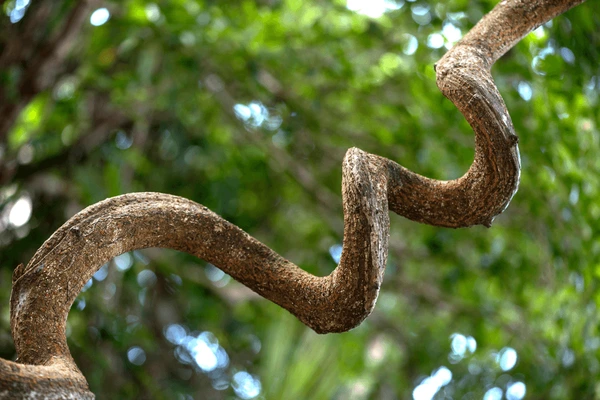
- 17 Jan 2024
Why is it in the News?
A dying traditional game, given a fresh lease of life at the ongoing Karbi Youth Festival (KYF) in central Assam’s Karbi Anglong district, has fuelled a drive for conserving a creeper with an African connection.
About African Dream Herb:
- The African dream herb, also known by various names such as Giant sea bean, snuff box, and Entada rheedii, is a perennial climbing vine valued by African traditional healers for its ability to induce vivid dreams, facilitating efficient communication with ancestors.
- Indigenous to Africa, Asia, Australia, and Madagascar, this vine thrives in tropical lowlands, along coastlines, river banks, woodlands, thickets, and riverine rainforests.
- Uses: A paste derived from its leaves, bark, and roots serve purposes ranging from wound cleaning to treating burns and addressing jaundice in children.
- The plant's tea, made from its entirety, aids in improving blood circulation to the brain and healing the aftermath of a stroke.
- The bark is employed to treat ailments such as diarrhoea, dysentery, and parasitic infections.
- This vine produces dark brown, spherical seeds, almost the size of a human patella or kneecap, used in the traditional game 'Hambi Kepathu,' associated with the origin of the Karbi community.
What is Hambi Kepathu?
- Also known as Simrit in some regions of Karbi Anglong, Hambi Kepathu is played on three rectangular courts with two teams of three members each.
- In this male-only game, players place a 'hambi' (glazed creeper seed) vertically on the midpoint of the boundary line for opponents to hit with their 'hambi.'
- The name Hambi Kepathu is derived from the first syllables of the names of a Karbi sister-brother duo, adding to the array of traditional Karbi games such as 'Pholong' (spinning top), 'Thengtom Langvek' (torch swimming), and 'Kengdongdang' (bamboo stilt race).
PM pays homage to Sri Guru Gobind Singh Ji on his Parkash Utsav (The Hindu)
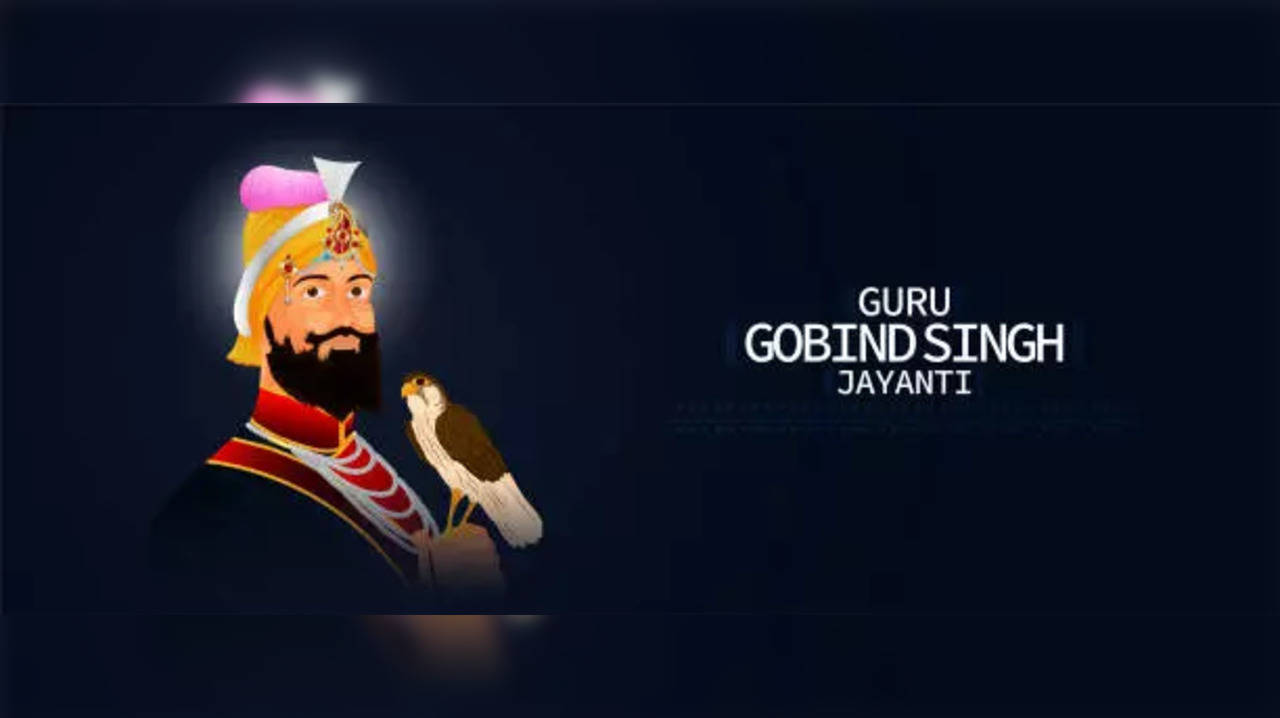
- 17 Jan 2024
Why is it in the News?
January 17 marks the 357th birth anniversary of Guru Gobind Singh, the revered Sikh leader born in Patna, Bihar.
About Guru Gobind Singh:
- Guru Gobind Singh, the 10th and the last Guru of the Sikhs, was born as Gobind Rai on December 22, 1666, in Patna, Bihar, to Guru Teg Bahadur, the ninth Guru of Sikhism.
- Following the martyrdom of his father by the Mughal emperor Aurangzeb in 1675, Guru Gobind Singh assumed leadership at the age of nine.
- Renowned as a warrior, poet, and prophet, Guru Gobind Singh is cherished by Sikhs for his defence of faith and advocacy for equality and justice.
- In 1699, Guru Gobind Singh formed the institution of the Khalsa and introduced the Five Ks — Kesh (uncut hair), Kangha (wooden comb), Kara (iron or steel bracelet), Kirpan (sword), and Kacchera (short breeches).
- He fought 14 wars against his oppressors and tyrants, but with ethical and moral principles, never taking captives, nor damaging places of worship; he was never the first to be the aggressor.
- The notable conflicts include the Battle of Bhangani, the Battle of Nadaun, the Battle of Anandpur, the Battle of Chamkaur, the Battle of Muktsar, and the Battle of Khidrana
- While continuing to lead with steely determination, Guru Gobind Singh faced with fortitude, the execution of his two sons, Zorawar Singh and Fateh Singh.
- The duo was bricked alive at Sirhind by the then-governor.
- He lost two more sons in the battle of Chamkaur Sahib, yet he stayed true to his goal.
- When the Mughal army, numbering over a lakh, marched against his troop of 40 soldiers, he marched on bravely, penning his famous hymn, mitr pyare nu haal muridan da kehna (Oh beloved friend of the Lord, see the plight of your disciples).
- Guru Gobind is credited with finalising the manuscript of Guru Granth Sahib, declaring it to be the ultimate Guru of the Sikhs.
- His metaphysical, sublime and exquisite poetry has been immortalised in his composition, Dasam Granth, reflected in Jaap Sahib, Chandi Di Vaar, Tav Prasad savaiye and Benti Chaupai, among others.
- He wrote in Punjabi, Arabic, Braj Bhasa, Sanskrit and Persian and remains a much-revered guru.
- He was assassinated in 1708, at the age of 41.
Defence upgrade roadmap: Apex body led by Prime Minister, MoD sci-tech unit (Indian Express)
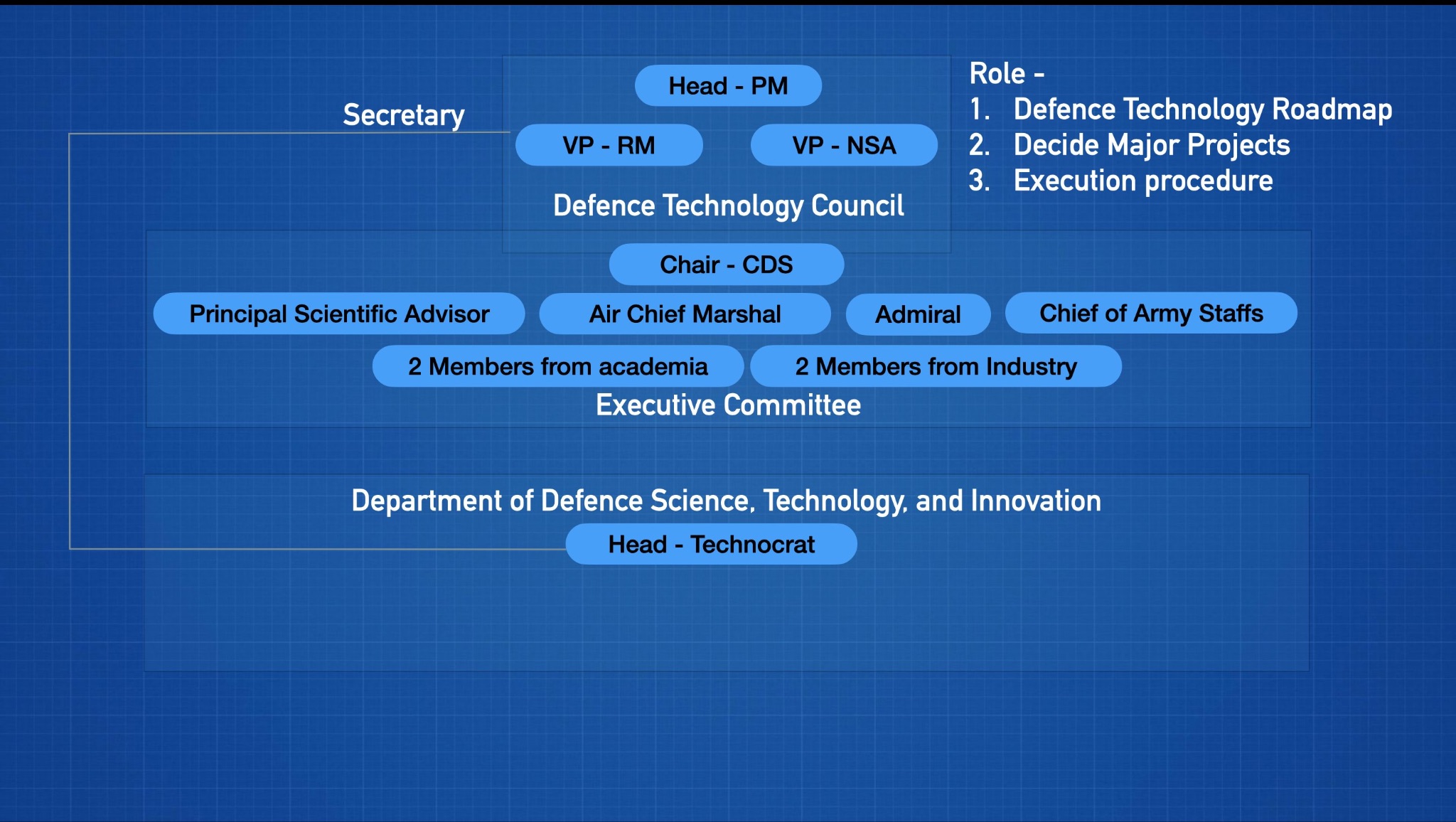
- 17 Jan 2024
Why is it in the News?
The expert committee, led by Vijay Raghavan, the former principal scientific advisor, proposed that the country's defence technology roadmap be overseen by an apex body called the Defence Technology Council, with the Prime Minister serving as its chair.
The context in which the Vijay Raghavan Committee was Established:
- Formed by the government last year, the committee was tasked with assessing the functioning of the Defence Research and Development Organisation (DRDO).
- The committee's report, submitted this month, follows the government's initiative to address significant delays in various DRDO projects.
- This scrutiny comes in response to concerns raised by the Parliamentary Standing Committee on Defence, which noted that 23 out of 55 mission mode projects faced substantial delays.
- In 2022, the Comptroller and Auditor General (CAG) highlighted that 67% of the 178 scrutinized projects failed to meet their initially proposed timelines.
- The CAG attributed these delays to factors such as persistent alterations in design specifications, delays in completing user trials, and delays in placing supply orders.
- The prevalent practice of seeking multiple extensions for projects, particularly those designated under the Mission Mode category, has been identified as undermining the intended purpose of these initiatives.
Major Recommendations of the Vijay Raghavan Committee:
- Establishment of the Defence Technology Council: Headed by the Prime Minister, with the Defence Minister and the National Security Advisor serving as Vice Presidents.
- This council is envisioned to play a pivotal role in charting the nation's defence technology roadmap, deciding on significant projects, and overseeing their execution.
- An executive committee, led by the Chief of Defence Staff, is proposed, featuring members such as the Principal Scientific Advisor, the three service chiefs, their vice chiefs, and representation from academia and industry.
- Creation of the Department of Defence Science, Technology, and Innovation: To be led by a technocrat, this department aims to foster defence research and development within the academic and startup ecosystem.
- Additionally, it is designated as the secretariat for the Defence Tech Council chaired by the Prime Minister.
- Drawing expertise from scientists in the Defence Research and Development Organisation (DRDO) and academia, it will compile a knowledge repository on production expertise, conduct background research for the Defence Tech Council, and contribute to informed decisions on technology production.
- Restructuring of DRDO's Focus: Recommends that DRDO concentrate on its original mission of research and development for defence purposes.
- The suggestion is for DRDO to abstain from involvement in productization, production cycles, and product management, tasks deemed more suitable for the private sector.
- Currently, DRDO is engaged in all aspects of its projects, spanning from research and development to production.
The last batch of Mizoram Bru refugees permanently settled in Tripura (The Hindu)
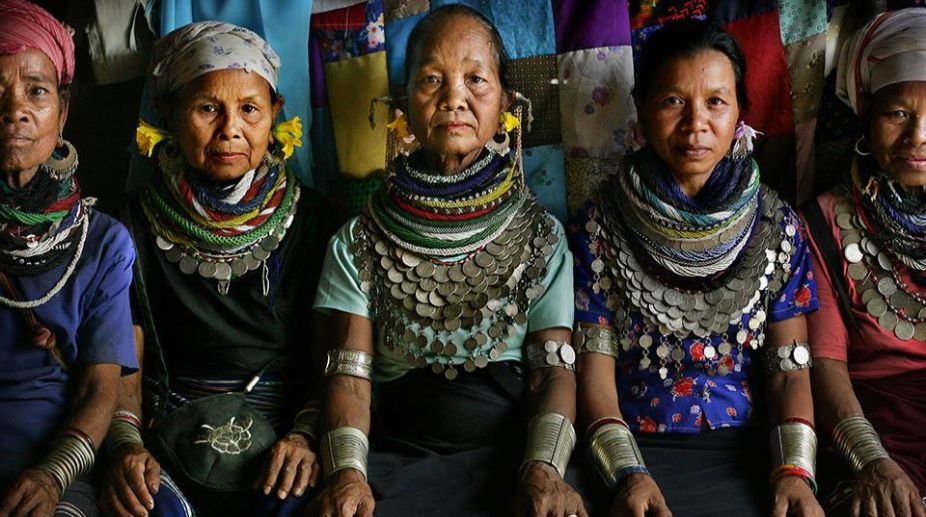
- 16 Jan 2024
Why is it in the News?
The Tripura government has allocated land for the rehabilitation of the last batch of Mizoram Bru refugees, who were granted permanent settlement in Tripura through a Home Ministry-initiated quadripartite agreement signed on January 16, 2020.
Who are Bru refugees?
- Brus, also referred to as Reangs, are a tribal community indigenous to northeast India and have historically resided in parts of Mizoram, Tripura, and Assam.
- In the state of Tripura, the Brus are a designated Particularly Vulnerable Tribal Group (PVTG).
- Most Brus residing in Tripura today have suffered more than two decades of internal displacement, fleeing ethnic persecution primarily from the neighbouring state of Mizoram.
Bru-Reang Refugee Crisis:
- It all started in 1995 when the Young Mizo Association and the Mizo Students' Association demanded that Brus be eliminated from Mizoram’s electoral rolls as they were not indigenous inhabitants.
- Being ethnically distinct from the majority of Mizos, the Brus are often referred to as “Vai” in the state, meaning outsiders or non-Mizos.
- Tensions escalated after the Brus retaliated against the Mizos’ attempts to disenfranchise them, and organized themselves into an armed group, the Bru National Liberation Front, and a political entity, the Bru National Union.
- They also demanded the creation of a separate Bru Autonomous District Council (ADC) in western Mizoram as per the provisions of the sixth schedule of the Indian Constitution.
- However, their attempts at seeking greater autonomy were foiled and resultant ethnic clashes forced many Reangs in Mamit, Kolasib and Lunglei districts of Mizoram to migrate to neighbouring Tripura in 1997.
- Today, roughly 35,000 Reangs continue to reside in north Tripura’s Kanchanpur camp as refugees, as per Home Ministry estimates.
Have there been any attempts to resettle the Brus?
- The state governments, along with the union government have made multiple attempts to send Brus back to their homeland in Mizoram.
- But until 2014, following eight rounds of resettlement, only an estimated 5,000 individuals, or 1622 Bru-Reang families returned to Mizoram in various batches.
- In July 2018, the governments of Tripura, Mizoram, and the central government concluded a quadripartite pact with Bru community representatives to resettle refugees in Mizoram.
- This was however opposed by not only native Mizo groups but also by the Reangs who feared threats to life and further ethnic repression in their home state.
- Efforts were still made to pursue the terms of this pact. The supply of free ration to relief camps was halted on instructions of the Home Ministry in a bid to hastily complete the repatriation of refugees, which resulted in at least six starvation deaths.
- Sensing a failure of the 2018 pact, the four groups once again came together in January 2020 to sign another quadripartite pact to resettle the Brus, this time in the state of Tripura.
- The central government earmarked a Rs 600 crore package to aid the rehabilitation efforts, and the Bru families were promised a residential plot, a fixed deposit of Rs 4 lakh, a Rs 1.5 lakh grant to construct their houses, as well as free ration and a monthly stipend of Rs 5,000 for a period of two years.
- Additionally, the renewed 2020 pact also promised to include the displaced Reangs in the electoral rolls in Tripura.
Darjeeling zoo’s success with snow leopards: Why wild cats are fussy breeders (Indian Express)
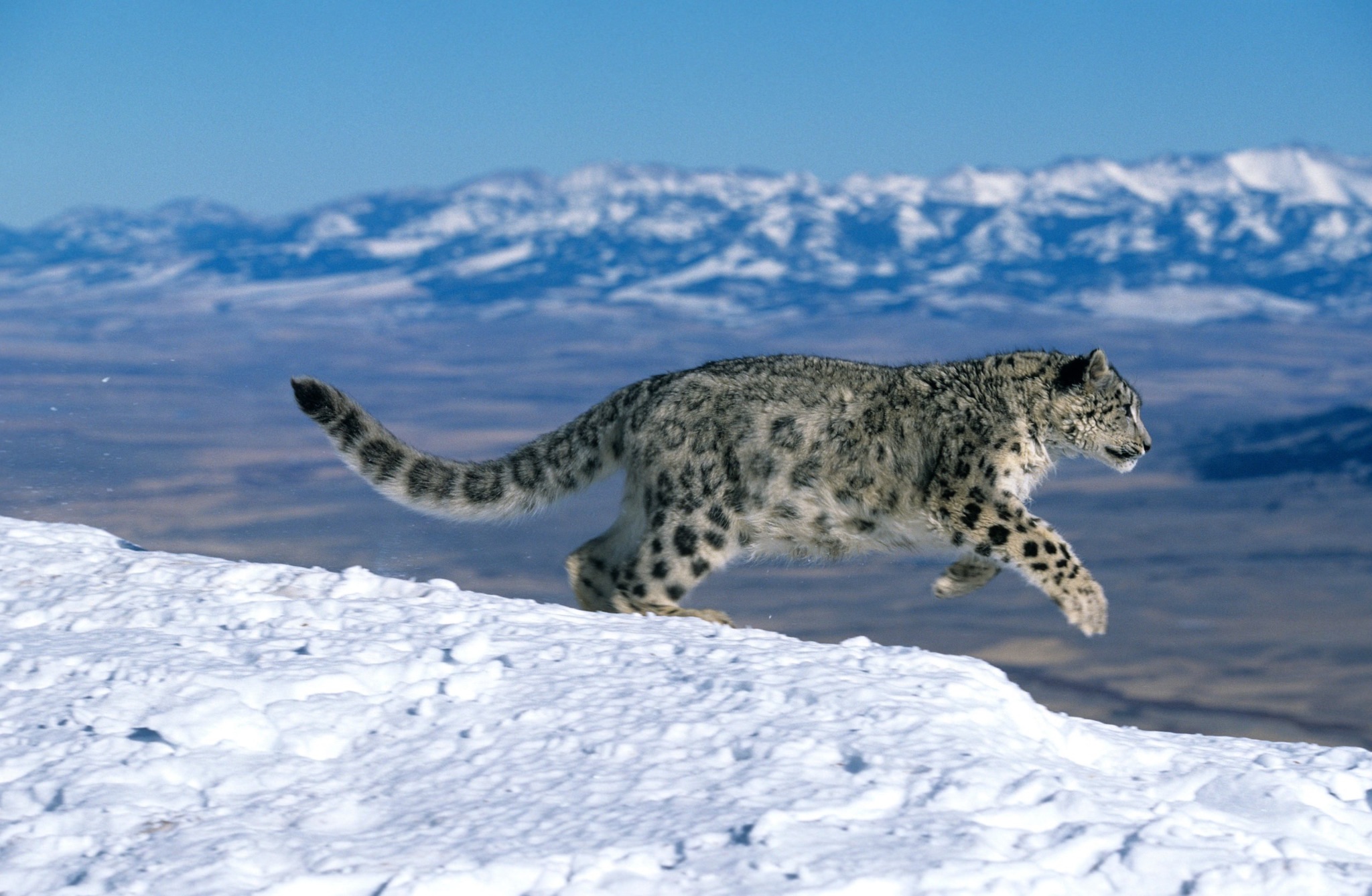
- 16 Jan 2024
Why is it in the News?
The Padmaja Naidu Himalayan Zoological Park (PNHZP) in Darjeeling has made headlines for successfully breeding 77 snow leopards since the 1980s, placing it next only to New York’s Bronx Zoo, which has produced 80 snow leopard cubs since it started breeding experiments with the species in the 1960s.
About Snow Leopard:
- The snow leopard, also known as the ounce, is a large Asian cat belonging to the family Felidae, classified as Panthera uncia.
- It preys on various animals, including marmots, wild sheep, ibex, and domestic livestock. As the apex predator in the mountain ecosystem, snow leopards serve as vital indicators of ecosystem health.
- Habitat: Native to the mountain ranges of Central and South Asia, snow leopards are found in India, specifically in the western Himalayas covering Jammu and Kashmir, Ladakh, Himachal Pradesh, Uttarakhand, Sikkim, and Arunachal Pradesh in the eastern Himalayas.
- Threats to Survival: With an estimated 4,000 to 6,500 snow leopards remaining in the wild, around 500 of them are in India.
- Human settlement expansion, particularly livestock grazing, has escalated conflicts.
- Climate change, causing a rise in average temperatures across their habitat, poses an additional threat.
- Poaching, driven by illegal trades in pelts and body parts used in traditional Chinese medicine, further endangers their lives.
- Protection Status:
- IUCN Red List: Vulnerable
- CITES: Appendix I
- Wildlife (Protection) Act, 1972: Schedule I
- Conservation Efforts: The Government of India initiated Project Snow Leopard in 2009 to safeguard and conserve the snow leopard population and their habitats through participatory policies.
- Under the UNDP's SECURE Himalaya project in 2020, India's first Snow Leopard Conservation Centre was launched in Uttarkashi, Uttarakhand, promoting conservation efforts in the region.
About Padmaja Naidu Himalayan Zoological Park (PNHZP):
- Formerly known as the Himalayan Zoological Park, the PNHZP was established in August 1958 in Darjeeling, West Bengal.
- Dedicated to the preservation of ecological balance in the Eastern Himalayas, the park pursues the following objectives:
- Ex-situ Conservation and Captive Breeding: The park focuses on the ex-situ conservation and captive breeding of endangered Himalayan animal species.
- Awareness and Education: Aiming to educate and motivate both local residents and visitors, the park conducts awareness campaigns highlighting the significance of Himalayan ecosystem conservation.
- Applied Research: The PNHZP initiates applied research in animal biology, behaviour, and healthcare, contributing to a better understanding of these aspects.
- Conservation Pioneering: Recognized as a conservation pioneer, the zoo initiated the first ex-situ conservation breeding program in 1986, commencing with the Snow Leopard conservation breeding project.
- The Red Panda project followed suit in 1990.
- High-Altitude Zoo: The PNHZP holds the distinction of being the largest high-altitude zoo in the country, making significant strides in the conservation of endangered Eastern Himalayan species in India.
How do flights land safely despite fog and low visibility? The wizardry tech that makes it possible! (Financial Express)
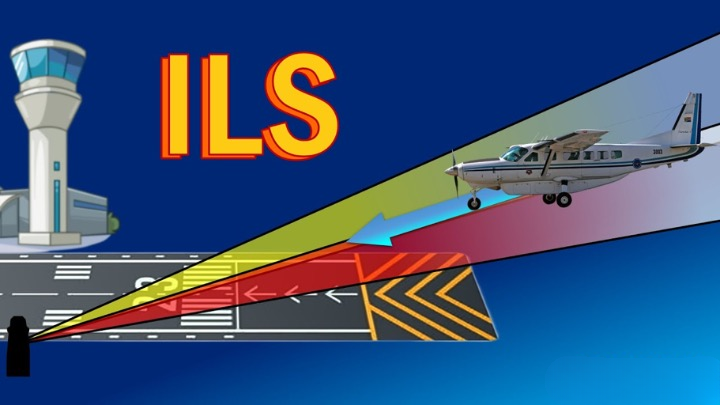
- 16 Jan 2024
Why is it in the News?
In the past few days, the Delhi airport has experienced chaos, resulting in over 100 flight delays, 10 flights being diverted, and some even cancelled due to low visibility caused by dense fog conditions affecting flying operations.
What is an Instrument Landing System?
- Fog, which is the suspension of water droplets near the ground, poses a considerable obstacle to aircraft operations during instances of reduced visibility.
- This atmospheric condition results in thick mist which hampers flight operations, necessitating the reliance on instruments like the “Instrument Landing System” (ILS) to navigate through the obscured surroundings.
- ILS is a standard International Civil Aviation Organisation (ICAO) precision landing aid that is used to provide accurate azimuth (angular measurement in a spherical coordinate system) and descent guidance signals for guidance to flight for landing on the runway under adverse weather conditions.
- To put things in perspective, ILS operates in tandem with ground-based equipment and avionic components on the aircraft, providing precise guidance to pilots during the critical phases of approach and landing.
- The ILS guiding system helps planes land in low visibility with the help of radio signals and also sometimes high-intensity lighting arrays.
- Among the various categories of ILS, Category 3 (CAT III) is the most significant due to its capability to support landing operations in low visibility conditions, thereby enhancing flight safety and operational efficiency.
- At present, airports like Delhi, Amritsar, Jaipur, Lucknow, and Kolkata among others use CAT IIIB technology in India.
- However, the absence of pilots or the ILS technology can lead to massive delays and cancellations.
- Moreover, a lot of financial and logistics are required to operate the technology which is still a distant dream at many airports around the country.
How does this system work?
- Consisting of two main components—the localizer and the glide slope—the CAT safe system functions by transmitting radio signals that help pilots align their aircraft with the correct runway and maintain the appropriate descent path.
- The localizer ensures lateral alignment, guiding the aircraft along the correct azimuth toward the runway centerline.
- Simultaneously, the glide slope provides vertical guidance, aiding pilots in maintaining the proper descent angle for a safe landing.
- Together, these components create a reliable and accurate navigational reference, allowing pilots to execute precision landings even when external visibility is severely compromised.
- Notably, ILS-equipped runways are equipped with ground-based transmitters positioned at the end of the runway, emitting signals that are received by the aircraft’s onboard ILS receiver.
- As the aircraft approaches the runway, the pilot uses the visual and audible cues provided by the ILS to make real-time adjustments, ensuring that the aircraft remains aligned with the desired glide path.
- In essence, the technology significantly enhances aviation safety and operational reliability by enabling pilots to conduct precise landings even in conditions that would otherwise pose a considerable risk.
NHAI cracks down on multiple FASTags for a single vehicle, launches ‘One Vehicle, One FASTag’ program (Financial Express)
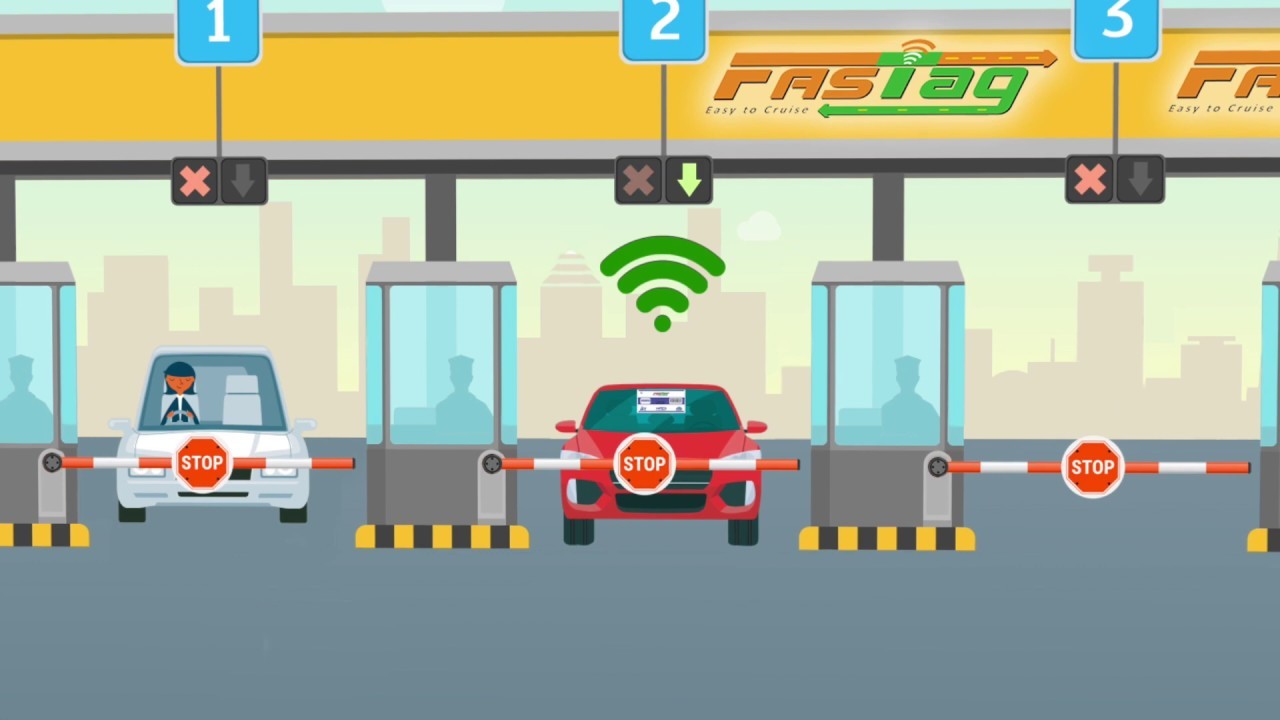
- 16 Jan 2024
Why is it in the News?
The National Highways Authority of India (NHAI) announced on Monday (January 15) that FASTags with valid balances but incomplete KYC will be deactivated by banks after January 31, 2024.
What is the ‘One Vehicle, One FASTag’ Program?
- In a bid to enhance the efficiency of the electronic toll collection system and facilitate seamless movement at toll plazas, NHAI has initiated the ‘One Vehicle, One FASTag’ program, discouraging the use of a single FASTag for multiple vehicles or linking multiple FASTags to a particular vehicle.
- NHAI encourages FASTag users to complete the ‘Know Your Customer’ (KYC) process for their latest FASTag, aligning with RBI guidelines.
- To prevent inconvenience, users must ensure KYC completion for their latest FASTag and discard all previously issued FASTags through their respective banks.
- The initiative aims to deactivate or blacklist previous tags after January 31, 2024.
- Ensuring seamless and comfortable journeys: The ‘One Vehicle, One FASTag’ initiative, coupled with the high penetration rate of FASTag at around 98% and over 8 crore users, is poised to streamline toll operations, ensuring efficient and comfortable journeys on national highways.
About FASTags:
- FASTag serves as an electronic toll collection system in India, administered by the NHAI.
- Utilising Radio Frequency Identification (RFID) technology, it facilitates toll payments directly from the linked prepaid or savings account or directly from the toll owner.
- FASTag utilizes Radio Frequency Identification (RFID) technology, allowing seamless toll payments while the vehicle is in motion.
- Windscreen Affixation: FASTag is affixed on the vehicle's windscreen, providing a hassle-free experience for customers to drive through toll plazas without the need to stop for payments.
- Automatic Deduction: Toll fares are automatically deducted from the linked account of the customer, ensuring a swift and cashless transaction.
- Vehicle Specific: Once affixed to a vehicle, FASTag becomes vehicle-specific, preventing transferability to another vehicle.
- Purchase from NETC Member Banks: FASTag can be conveniently purchased from any of the National Electronic Toll Collection (NETC) Member Banks.
- Prepaid Account Recharge: In the case of linking FASTag to a prepaid account, customers need to recharge or top-up the tag based on their usage.
Govt cuts windfall tax on petroleum crude to Rs 1,700 per tonne (The Hindu)

- 16 Jan 2024
Why is it in the News?
The government has cut the windfall tax on domestically-produced crude oil to ?1,700 per tonne from ?2,300 per tonne with effect from January 16.
What is Windfall Tax?
- A Windfall Tax is imposed by governments on specific industries that experience exceptionally high profits due to economic conditions surpassing the norm.
- The term "windfall" denotes an unforeseen surge in profits, leading to the imposition of the windfall tax on the excess gains.
- Imposition Criteria: Governments impose the Windfall Tax when there is a sudden and substantial increase in an industry's revenue.
- Notably, this increase must be unrelated to the company's intentional actions, such as business strategies or expansions, but instead linked to external events beyond its control.
- A Windfall Tax is typically triggered by external occurrences, such as the unexpected surge in profits observed in the oil and gas industries amid the Russia-Ukraine conflict.
- Tax Rates: Governments tax these windfall gains at rates higher than the standard tax rates applicable to regular profits.
- Target Industries: Commonly, industries such as oil, gas, and mining become targets for windfall gains tax.
Objectives:
- Redistribution of Gains: To redistribute unexpected profits, especially when high prices benefit producers at the expense of consumers.
- Funding Social Welfare Schemes: Utilizing the windfall tax revenue to support social welfare initiatives.
- Supplementary Revenue Source: Acting as an additional revenue stream for the government.
- Addressing Trade Deficit: Providing a means for the government to mitigate the widening trade deficit in the country.
When Did India Introduce Windfall Tax?
- To address the shortage of energy products on the domestic market, the Indian government added a special additional excise duty on the export of gasoline and diesel, known as the Windfall Tax, on July 1st, 2022.
Why are Countries Levying Windfall Taxes Now?
- Since the past few years, gasoline prices, crude oil, gas, and coal have significantly increased.
- COVID-19 and the conflict between Ukraine and Russia made this increase even more pronounced.
- Because of this, energy companies profited handsomely at the expense of consumers, who now pay much higher prices for their energy use.
- The UN Secretary-General, therefore, encouraged nations to impose windfall taxes on those companies that have greatly benefited from the rise in the price of fossil fuels.
- As a result, many countries, including the UK, Germany, and others, besides India, are considering imposing Windfall Taxes.
Conclusion
In conclusion, a windfall tax is a tax that a government may impose or an additional tax that may be imposed on a business when it generates a sizable unanticipated profit, particularly if the company has benefited from favourable economic conditions.
Companies in specific economic sectors, such as the oil and gas industry, that profit from circumstances like commodity shortages that significantly drive up the cost of their goods at the expense of consumers may be subject to windfall taxes.
Goyal asks FCI officers to turn whistleblowers to curb corruption (The Hindu)
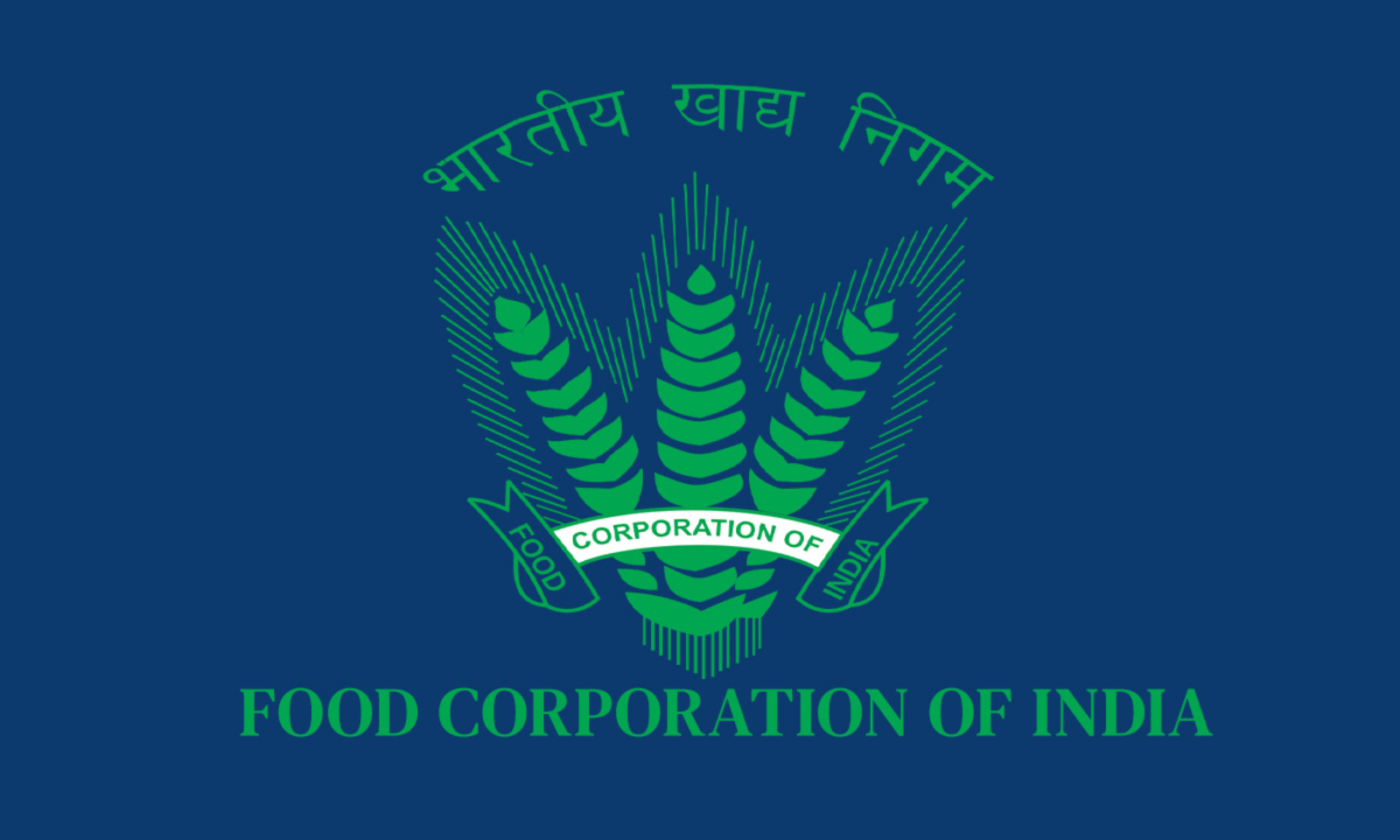
- 15 Jan 2024
Why is it in the News?
Recently, the Food Minister said the role of FCI is not only to deliver ration but also to instil confidence in farmers and beneficiaries by bringing in transparency, efficiency and accountability.
About the Food Corporation of India (FCI):
- FCI is a statutory body with multifaceted objectives aimed at ensuring national food security.
- It was established through the enactment of the Food Corporation Act, of 1964 by the Parliament.
- As part of the Ministry of Consumer Affairs, Food and Public Distribution, FCI plays a pivotal role in supporting farmers, managing food distribution, and maintaining strategic food grain stocks.
Key Objectives:
- Effective Price Support Operations: FCI focuses on safeguarding farmers' interests through efficient price support operations.
- Public Distribution System (PDS): The distribution of food grains nationwide for the PDS forms a crucial aspect of FCI's mandate.
- Operational and Buffer Stocks: FCI is entrusted with maintaining optimal levels of operational and buffer stocks to ensure national food security.
Role in Ensuring Food Security:
- Procurement at Minimum Support Price (MSP): FCI actively engages in procuring food grains, primarily wheat and paddy, under the Price Support Scheme to guarantee MSP for farmers and provide affordable food to vulnerable sections.
- Coarse Grains Procurement: Additionally, FCI oversees the procurement of coarse grains, such as Jowar and Bajra, in coordination with state government agencies.
- Storage Capacity: To meet storage obligations, FCI boasts an extensive network of storage depots and silos strategically positioned across the country.
- Movement and Distribution: FCI undertakes the movement of food grain stocks from surplus to deficit regions, ensuring planned delivery through PDS, creating buffer stocks, and supplying food grains for defence, paramilitary forces, and natural calamities.
In conclusion, FCI's multifaceted role encompasses procurement, storage, and distribution, contributing significantly to the nation's food security and the well-being of farmers.
Medical care on India’s trains is running late, with passengers at risk (The Hindu)
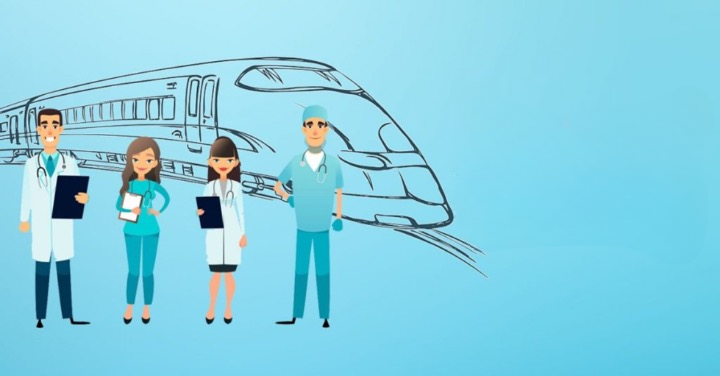
- 15 Jan 2024
Why is it in the News?
The Balasore train accident in June 2023 raised important concerns about rail safety, but it was largely about accident-related safety.
Provision of Medical Care in Railway:
- In 1995, a ‘Special first aid box’ was provided in long-distance superfast trains, Shatabdi and Rajdhani trains.
- In 1996, as part of a pilot project, Railways stationed a medical team in two long-distance trains.
- This team consisted of a medical officer, a male nurse, and an attendant.
- The Railways subsequently discontinued the service – but to make healthcare accessible, it decided to give doctors travelling on trains a 10% discount if they were willing to provide medical services en route.
- In 2017, the Supreme Court directed the Railways to set up a committee consisting of experts from the All India Institute of Medical Sciences (AIIMS) to recommend further measures.
- Based on the committee’s recommendations, the Railways decided to modify the contents of the first aid boxes and provide them at all railway stations and in all passenger-carrying trains.
- It also mandated first-aid training for railway staff at the time of joining and once every three years.
- In 2021, the Railways launched an integrated helpline number – 139 – for all queries concerning the railways, including medical assistance.
Way Forward
- Railways should ensure the updated 88-item first-aid list is in place on all trains and that passengers are aware of these services.
- Periodic inspections are necessary to maintain the quality of care as well.
- Finally, the Railways need to install a system to capture data on the healthcare needs of people travelling on trains and use that to inform policy.
In a big push for India's energy security, ONGC makes two significant gas discoveries in the Mahanadi basin block (Business World)
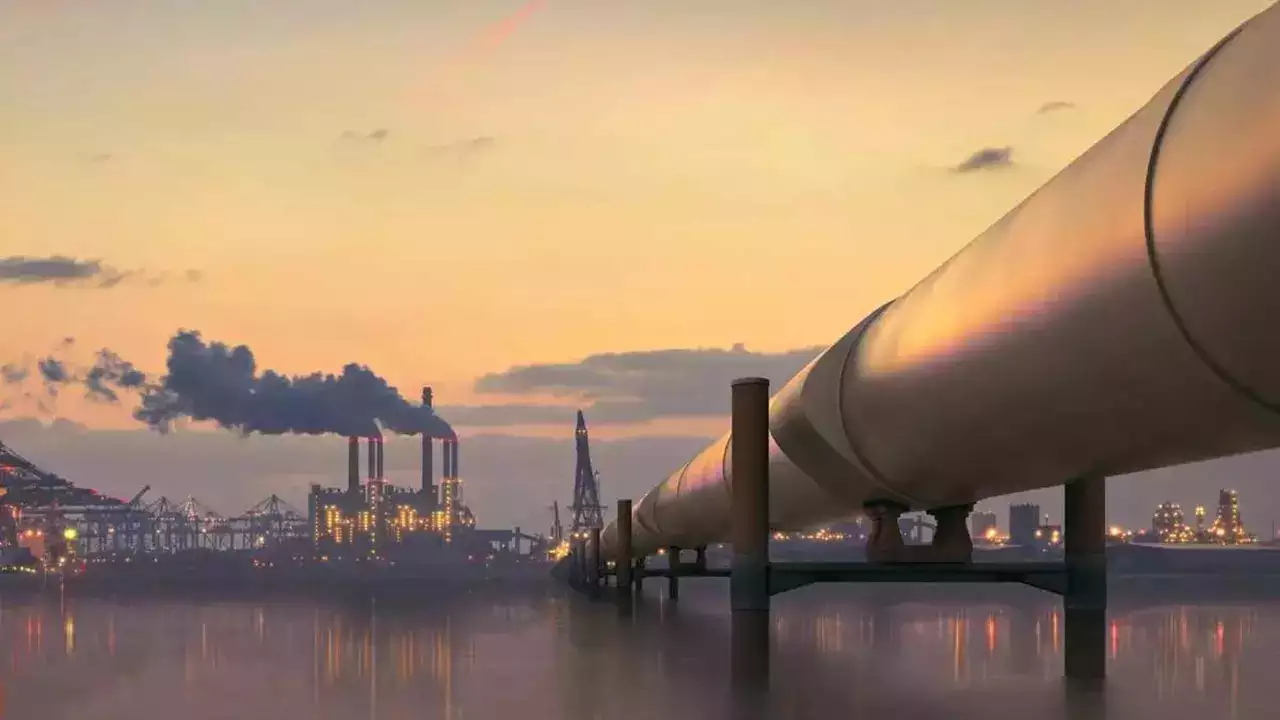
- 15 Jan 2024
Why is it in the News?
In a significant stride towards bolstering India's energy security, the state-owned Oil and Natural Gas Corporation (ONGC) has successfully unearthed two substantial natural gas reserves within the Mahanadi basin block in the Bay of Bengal.
About the Mahanadi River Basin:
- Ranked as the 8th largest river basin in the country, the Mahanadi River Basin boasts a substantial catchment area spanning 139,681.51 sq. km, representing approximately 4.28% of the total geographical area of India.
- Encompassing significant portions of Chhattisgarh and Odisha, along with smaller segments of Jharkhand, Maharashtra, and Madhya Pradesh, this basin stretches across diverse terrains and is surrounded by the Central India hills to the north, the Eastern Ghats to the south and east, and the Maikala range to the west.
- The basin's physiographic features are categorized into four regions:
- The northern plateau
- The Eastern Ghats
- The coastal plain (a fertile delta area), and
- The erosional plains of the central tableland.
- Notably, the basin receives about 90% of its rainfall during the monsoon season.
- Agriculture dominates the landscape, covering 54.27% of the total area, while water bodies occupy 4.45%. Predominant soil types include red and yellow soils.
Key Characteristics of the Mahanadi River:
- As one of the major east-flowing peninsular rivers in India, the Mahanadi River originates from the Sihawa range of hills in the Dhamtari district of Chhattisgarh.
- Water Potential: Second only to the Godavari River in terms of water potential among peninsular rivers, the Mahanadi River spans a total length of 851 km, with 357 km flowing through Chhattisgarh and 494 km through Odisha.
- Tributaries: The river is augmented by left bank tributaries including the Seonath, Hasdeo, Mand, and Ib, while the right bank receives contributions from the Ong, Tel, and Jonk.
- Hirakud Dam: An engineering marvel, the Hirakud Dam, recognized as the world's longest earthen dam at 26 km, is strategically located about 15 km from Sambalpur in Odisha, providing essential water management for the region.
- The Mahanadi River plays a crucial role in the hydrology of Chilika Lake, designated as a wetland of international importance under the Ramsar Convention.
- Approximately 61% of the lake's inland flow originates from the Mahanadi River system, mainly through its distributaries, Daya and Bhargabi.
Global surgery: why access to essential surgery is important (The Hindu)
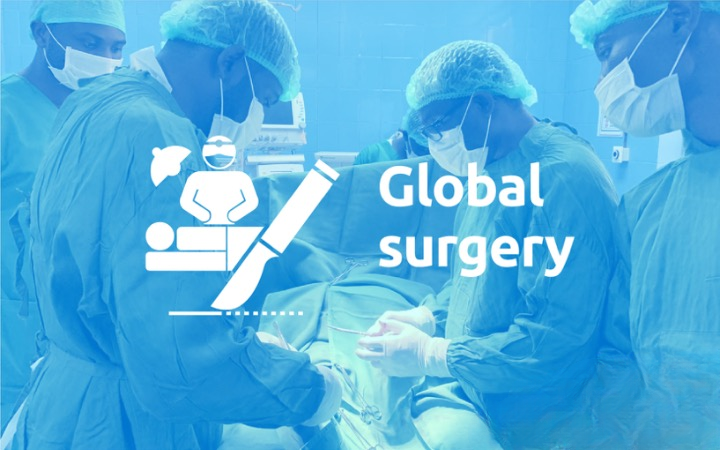
- 15 Jan 2024
Why is it in the News?
Global surgery is the neglected stepchild in global health. The neglect is more shocking in South Asia which has the largest population globally lacking access to essential surgery.
What is global surgery?
- Global surgery focuses on equitable access to emergency and essential surgery.
- While it predominantly focuses on low- and middle-income countries (LMICs), it also prioritises access disparities and under-served populations in high-income countries (HICs).
- These “surgeries” include essential and emergency surgeries such as surgery, obstetrics, trauma, and anaesthesia (SOTA).
- Despite small differences, there is largely a consensus across multiple international groups on about thirty or so procedures that fall under the umbrella of emergency and essential surgery.
The Global Scenario:
- As per the Lancet Commission on Global Surgery (LCoGS), more than 70% of the global population, which amounts to five billion individuals, lacks timely access to safe and affordable surgical care.
- Notably, over 1.6 billion of these individuals reside in South Asia. Access gaps are particularly acute, with 99% and 96% of people in low- and lower-middle-income countries (LLMICs), respectively, facing challenges compared to 24% in high-income countries (HICs).
Concerns and Impact:
- In 2010, surgically treatable conditions contributed to around 17 million deaths, surpassing the combined mortality burden of HIV/AIDS, tuberculosis, and malaria.
- The global disease burden also translates into a significant economic impact, with a projected cumulative loss of $20.7 trillion to the GDP across 128 countries by 2030 if the scale-up of surgical care remains inadequate.
Measures implemented for Global Surgery:
- India's Pradhan Mantri Jan Arogya Yojana has played a pivotal role by providing millions of surgeries at either zero or negligible cost, specifically benefiting the bottom 40% of the Indian population.
- In South Asia, Pakistan has developed a National Surgical Care Vision, while Nepal has initiated a comprehensive National Plan Encompassing Surgical, Obstetric, and Anaesthesia Care (NSOAP).
Way Ahead
- Addressing global surgery challenges requires a multi-faceted approach, emphasizing research, innovation, policy focus, and sustained financing.
- Key stakeholders, including organizations like the World Health Organization (WHO) and various non-profit groups, hold significant potential in advancing and supporting global surgery initiatives.
- Collaborative efforts on these fronts are crucial for ensuring equitable and accessible surgical care on a global scale.
India celebrates 76th Army Day with pride and gratitude (TOI)
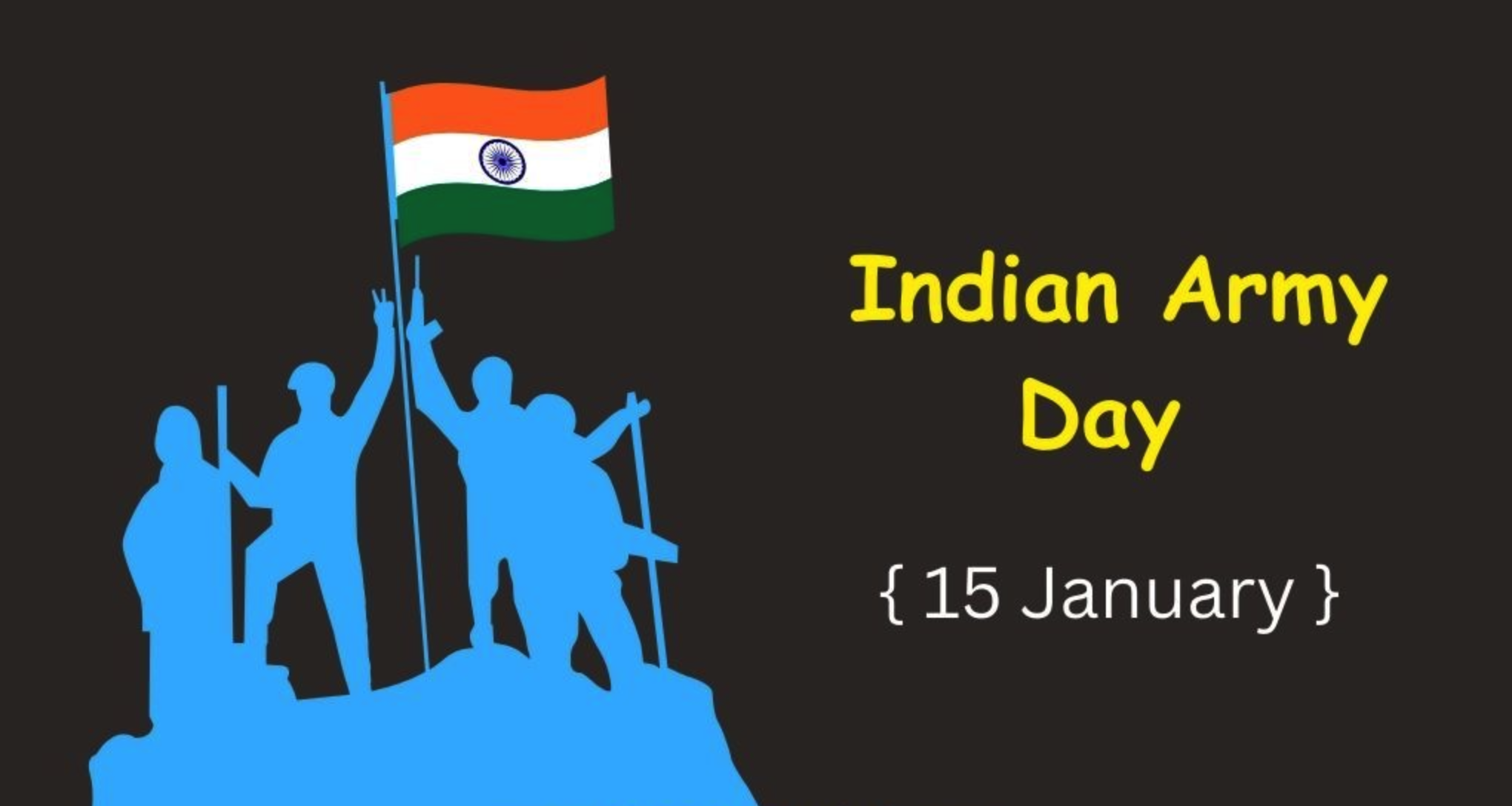
- 15 Jan 2024
Why is it in the News?
Prime Minister Narendra Modi and President Droupani Murmu conveyed their warm wishes to Indian Army personnel on the occasion of Army Day.
Why is Army Day celebrated?
- On January 15, KM Cariappa took charge of the Indian Army from General Sir Francis Roy Bucher in 1949, who was the last British-serving Army chief.
- KM Cariappa became the first-ever Indian General to command the Army in its long eventful journey.
- Later, General Cariappa also became the Field Marshal of India.
- KM Cariappa, who is popularly known as Kipper, received King's commission in 1919 and was part of the first group of Indian cadets at the Royal Military College in Sandhurst, UK.
- He was the first Indian who attended Staff College in Quetta and the first one to command a battalion.
- In 1942, Cariappa raised the 7th Rajput Machine Gun which was later known as 17 Rajput.
- He was conferred with Field Marshal Rank in 1986 and passed away in 1993 at the age of 94.
Indian Army Day 2024: Theme
- The theme of the Indian Army Day 2024 is “In Service of the Nation”.
- The theme of 2024 focuses on the main essence of the Army.
- This year’s theme also resembles the motto of the Indian Army, “Service Before Self.”
- This year marks the 76th Army Day.
- The parade will be held under the command of the Army's Central Command, which is headquartered in Lucknow.
Indian Army Day 2024: Significance
- Indian Army Day is also known as Bhartiya Sena Diwas.
- The day promises a grand celebration to honour the valour and service of the Army officers.
- It also proves to be a day dedicated to spreading awareness and enthusiasm among the youth of the nation to join the Bhartiya Sena and serve the country selflessly.
- Army Day is dedicated to appreciating and acknowledging the sacrifice and dedication of the Indian Army towards protecting the country from the illegal invasion of enemies and attacks.
Indian Army Day 2024: History
- The Indian Army was established on 1 April 1895 by the British.
- Initially, the Indian Army was known as the Royal Indian Army.
- India attained Independence on 15 August 1947.
- On 15 January 1949, the first Commander-in-Chief of India General K.M. Cariappa took over the rule of British Army Official General Sir Francis Roy Bucher. Since then, this historic moment has been celebrated as Bhartiya Sena Divas.
- India is following the tradition of celebrating this grand day with great zeal and patriotism.
- Since 15 January 1949, India has been self-reliant in the field of defence.
The first-ever IUCN assessment of the Himalayan Wolf is out. And it is grim (DownToEarth)

- 13 Jan 2024
Why is it in the News?
The Himalayan Wolf is a prominent lupine predator found across the Himalayas the taxonomic status which was a puzzle till late, has been assessed for the first time in the International Union for Conservation of Nature (IUCN)’s Red List.
Key Findings:
- Population Decline: The IUCN assessment highlights a persistent reduction in the habitat area, extent, and quality of Himalayan wolves.
- The estimated total population ranges from 2,275 to 3,792 mature individuals, with 227 to 378 in India.
Primary Threats:
- Depredation Conflict: Arising from habitat modification, encroachment, and depletion of wild prey populations.
- Hybridization with Dogs: Particularly in Ladakh and Spiti, where feral dog populations are on the rise.
- Illegal Hunting: Driven by trade in fur and body parts, including paws, tongues, and heads.
About the Himalayan Wolf (Canis lupus chanco):
- It is also called Tibetan wolves, which live at more than 4,000 metres altitudes.
- Habitat: It is found in the Himalayas (Nepal and India) and the Tibetan Plateau.
- Exhibits genetic adaptations to cope with hypoxic conditions.
- Characteristics: Adorned with thick fur, displaying brown colouration on the back and tail, complemented by paler yellows on the face, limbs, and underside.
- Larger than Indian and European wolves.
- Shows a preference for wild prey over domestic options.
- Conservation Status:
- IUCN’s Red List: Categorized as Vulnerable.
- Wildlife Protection Act, 1972: Listed under Schedule I.
- CITES: Included in Appendix I.
Recommended Actions for the Conservation of Himalayan Wolves:
- Ensure the preservation and restoration of robust wild prey populations and their natural habitats.
- Foster collaborative transboundary initiatives to safeguard and conserve the species across its range of countries.
- Integrate the Himalayan Wolf into comprehensive conservation programs for enhanced protection and sustainable management.
How GM mustard was developed, why the question of its approval has now reached the Supreme Court (Indian Express)
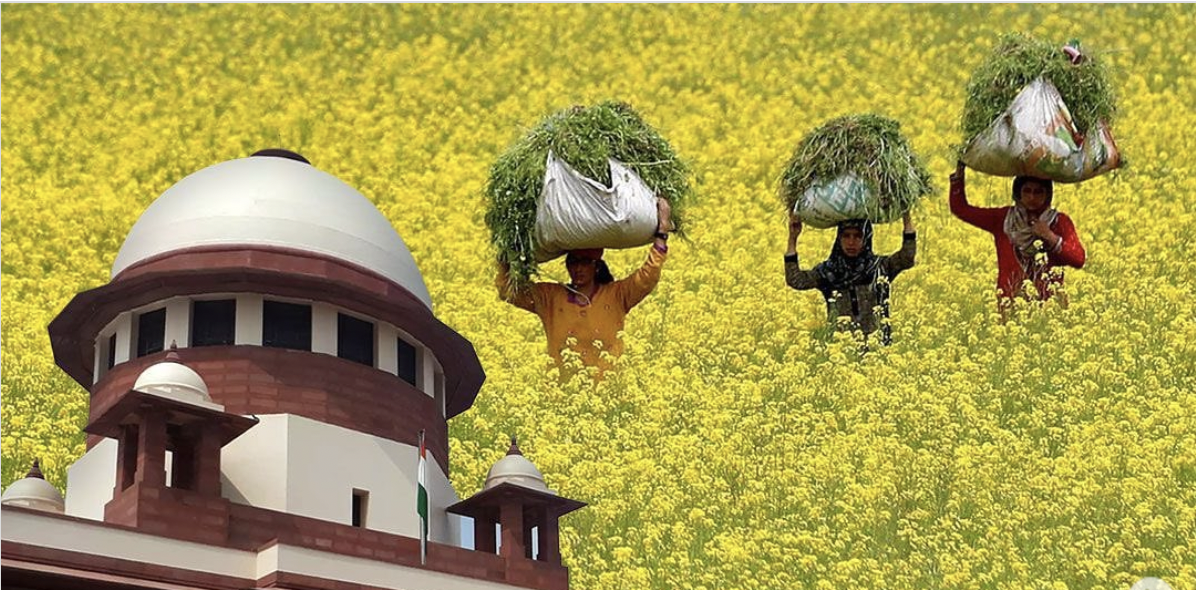
- 13 Jan 2024
Why is it in the News?
The Supreme Court recently questioned the Centre on why reports of the court-appointed Technical Experts Committee (TEC) on the biosafety of genetically modified (GM) crops were not looked into by the Genetic Engineering Appraisal Committee (GEAC).
Context:
- The Supreme Court has raised concerns about the approval process for the transgenic mustard hybrid DMH-11, developed by Delhi University with herbicide-tolerant traits through genetic modification.
- The Genetic Engineering Appraisal Committee (GEAC) had recommended its environmental release in 2022, but the court questioned whether the reports from the court-appointed Technical Experts Committee (TEC) were adequately considered before approval.
- DMH-11 contains two alien genes isolated from a soil bacterium called Bacillus amyloliquefaciens.
- Indian scientists improvised the barnase/barster male sterility technique to produce the DMH-11.
-
- Barnase/barster male sterility technique is a 1990s breeding innovation technique pioneered in Belgium.
- Indian scientists arranged the genes in a way that will allow a large number of high-yielding varieties of mustard to be developed, which is normally not possible.
- Genetically Modified Organisms (GMOs) undergo genome alterations, and transgenic organisms result from the introduction of foreign DNA sequences.
- Approval process for transgenic crops:
-
- Safety assessments by committees are conducted before the open field tests.
- Transgenic plants must be better than non-GM variants and environmentally safe for commercial clearance.
- GEAC recommends environmental release.
- Final approval by MoEFCC.
- Benefits of GM crops:
-
- Resistance against plant diseases.
- Improved yields
- Increased food security.
About the Genetic Engineering Appraisal Committee (GEAC):
- Establishment: GEAC operates as a statutory body mandated by the Environment Protection Act of 1986.
- Responsibility: It holds the responsibility for evaluating proposals concerning the environmental release of Genetically Modified (GM) organisms and associated products.
- GEAC operates under the purview of the Ministry of Environment, Forest and Climate Change.
Science Ministry team visits Hawaii to take stock of international telescope project (The Hindu)
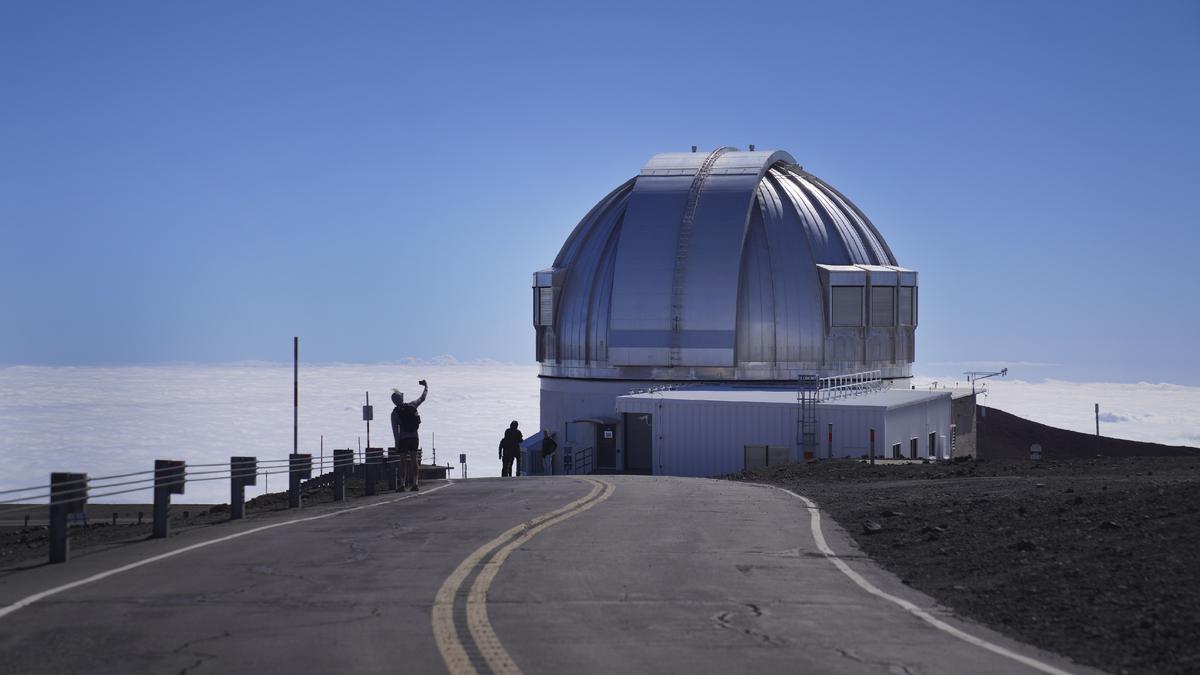
- 13 Jan 2024
Why is it in the News?
In a signal of renewed enthusiasm for a global scientific project, an official delegation from the Department of Science and Technology visited Mauna Kea, an inactive volcano on the island of Hawai’i in the United States, to discuss “challenges” to the Thirty Meter Telescope (TMT) project.
About Thirty Meter Telescope (TMT) Project:
- The name "Thirty Metre" denotes the telescope's substantial 30-meter mirror diameter, composed of 492 glass segments seamlessly integrated.
- It is an international collaboration involving institutions such as CalTech, the Universities of California, Canada, Japan, China, and India, facilitated by the Department of Science and Technology (DST) and the Department of Atomic Energy (DAE).
- Significance: Upon completion, it will surpass the world's largest existing visible-light telescope in width by threefold.
- A larger mirror enables greater light collection, enhancing the telescope's capability to observe distant, faint objects.
- It is projected to be over 200 times more sensitive than current telescopes and possess 12 times the resolving power of the Hubble Space Telescope.
- Application: The TMT's primary purpose includes the study of exoplanets, specifically exploring whether their atmospheres contain water vapour or methane, potential indicators of extraterrestrial life.
- Opposition against Construction: The proposed site, Mauna Kea in Hawaii, is contested due to its sacred significance to native Hawaiians, who perceive such projects as desecrating the mountain.
Contribution of India:
- India expects to be a major contributor to the project and will provide:
- Hardware (segment support assemblies, actuators, edge sensors, segment polishing, and segment coating)
- Instrumentation (first light instruments), and
- Software (observatory software and telescope control systems) worth $200 million.
- Of the 492 precisely polished mirrors that the telescope needs, India will contribute 83.
- The Indian Institute of Astrophysics (IIAP) is leading the consortium of Indian institutions that are involved with the TMT project.
India gears up for HPV vaccine drive against cervical cancer (Indian Express)
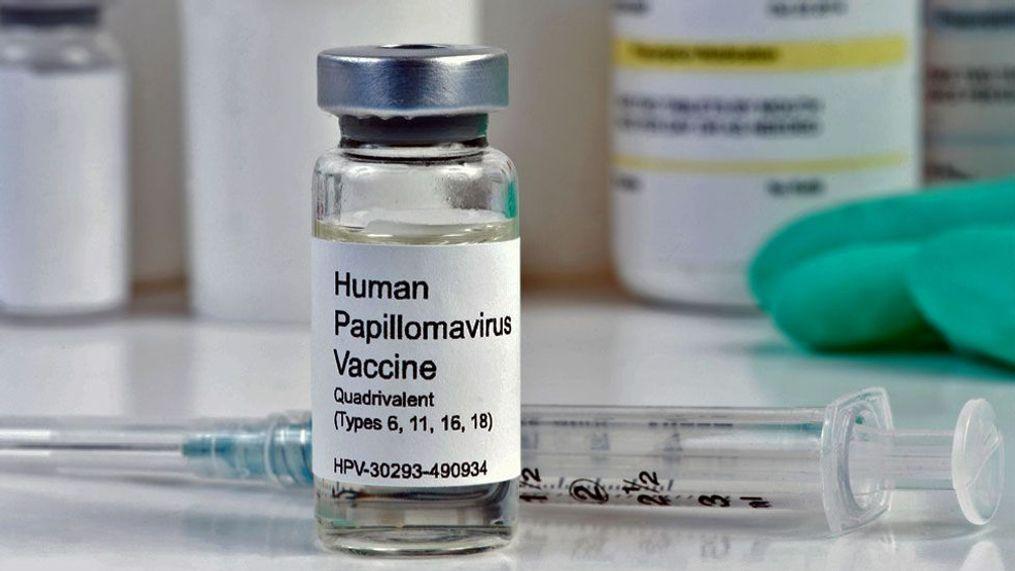
- 13 Jan 2024
Why is it in the News?
In a bid to reduce cases of cervical cancer, the government is likely to roll out an immunisation campaign against Human Papillomavirus (HPV) in the second quarter of the year.
What Is Cervical Cancer?
- Cervical cancer starts in the cells lining the cervix -- the lower part of the uterus (womb).
- Cancer starts when cells in the body begin to grow out of control.
- It typically develops slowly, primarily caused by persistent infection with certain high-risk types of human papillomavirus (HPV).
- Human papillomavirus (HPV) is a common sexually transmitted infection which can affect the skin, genital area and throat.
- Women living with HIV are 6 times more likely to develop cervical cancer compared to women without HIV.
- Cervical cancer can be cured if diagnosed at an early stage and treated promptly.
- According to WHO, countries around the world are working to accelerate the elimination of cervical cancer in the coming decades, with an agreed set of three targets to be met by 2030.
How does the vaccine prevent cancers?
- The quadrivalent vaccines, including the Serum Institute of India’s Cervavac, prevent the entry of four of the most common types of HPV 16, 18, 6 and 11 thereby preventing infections, genital warts, and eventually cancer.
- At least 14 HPV types have been identified to have the potential to cause cancer.
-
- Among these, HPV types 16 and 18 are considered to be the most oncogenic, causing about 70 per cent of all cervical cancer cases globally.
- Universal immunisation of girls also reduces the transmission of the infection to boys and protects them from other cancers.
Who should get the HPV vaccine?
- The vaccine has to be administered to adolescent girls before they are sexually active.
- This is because the vaccine can only prevent the entry of the virus.
- “HPV is a very common infection and 90% of sexually active women already have it.
- Other than that, the response to the vaccine is also better in adolescents.
- This is the reason a booster is needed for girls over the age of 15 years who get the shot.
- Although not covered by the planned government campaign, the vaccine can also be administered to adolescent boys and is recommended for men who have sex with men.
Why is an HPV vaccination campaign important?
- More than 95% of all cervical cancer cases are linked to persistent infection with certain high-risk strains of HPV.
- What this essentially means is vaccination can be effectively used to prevent the infection and thereby cervical cancer cases.
- This is especially necessary in a country like India which accounts for nearly a fifth of the cervical cancer cases globally.
-
- India reports around 1.25 lakh cases and about 75,000 deaths each year.
- “The vaccine is 97% effective in preventing cervical cancer. This is the reason more than 100 countries have now implemented HPV vaccination programmes and they have seen a decline in the incidence as well.
Ganga mission gets the power to allow treated sewage into water bodies (Indian Express)
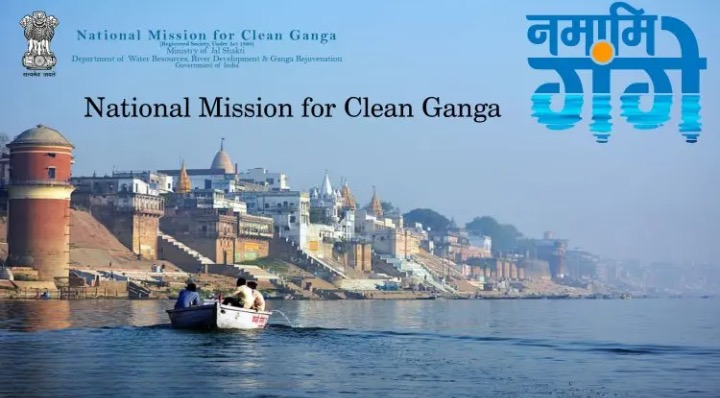
- 12 Jan 2024
Why is it in the News?
The National Mission for Clean Ganga (NMCG), the Centre’s nodal agency responsible for the abatement of pollution in river Ganga and its tributaries, has assumed new powers under which it may now permit the discharge of treated sewage and effluent that conforms to the prescribed “norms” into the river, canal or water bodies.
About the National Mission for Clean Ganga (NMCG):
- The National Clean Ganga Mission (NMCG) is a flagship programme developed by the National Council for the Rejuvenation, Protection and Management of the Ganga River, also known as the National Ganga Council.
- It is registered as a society under the Societies Registration Act, 1860.
- It came into existence on August 12th 2011 and is supported by the State-Level Program Management Groups (SPMGs) in Uttar Pradesh, Uttarakhand, Bihar, Jharkhand and West Bengal.
- The Government of India established this body to encourage a coordinated effort by the listed states to tackle the contamination of the Ganga River by offering financial and technological assistance.
Key objectives of the National Mission for Clean Ganga (NMCG):
- The project entails rehabilitating and boosting existing STPs and immediate short-term action to reduce pollution at the exit points on the riverfront in order to control the inflow of sewage.
- To preserve the consistency of the water cycle without altering the fluctuations of the natural season.
- Restore and control surface and groundwater supply.
- Regenerate and preserve the natural flora of the city.
- To preserve and invigorate the aquatic biodiversity and the riparian biodiversity of the Ganga River basin.
- Enable the public to engage in the process of protecting, rejuvenating and maintaining the water.
Major functions of the National Mission for Clean Ganga (NMCG):
- Execution of the National Ganga River Basin Authority (NGRBA) work program
- Integration of the National Ganga River Basin Project supported by the World Bank
- Supervise and manage the execution of projects approved by the Government of India under NGRBA
- To perform some additional research or duties as may be delegated by MoWR, RD & GJ in the context of restoration of the Ganga River
- Layout regulations and procedures for the conduct of NMCG affairs and contribute or revise, vary or amend them as and when required
- Grant or accept financial aid, loan securities or properties of any kind, and undertake and approve the management of any endowment trust, fund or gift that is not incompatible with the objectives of the NMCG.
- Take all such action and take any other action that might seem appropriate or relevant to the accomplishment of the goals of the NGRBA.
Article 30 Not Intended To Ghettoise Minorities, Minority Institution Can Include Others In Administration: Supreme Court In AMU Case Hearing (Indian Express)
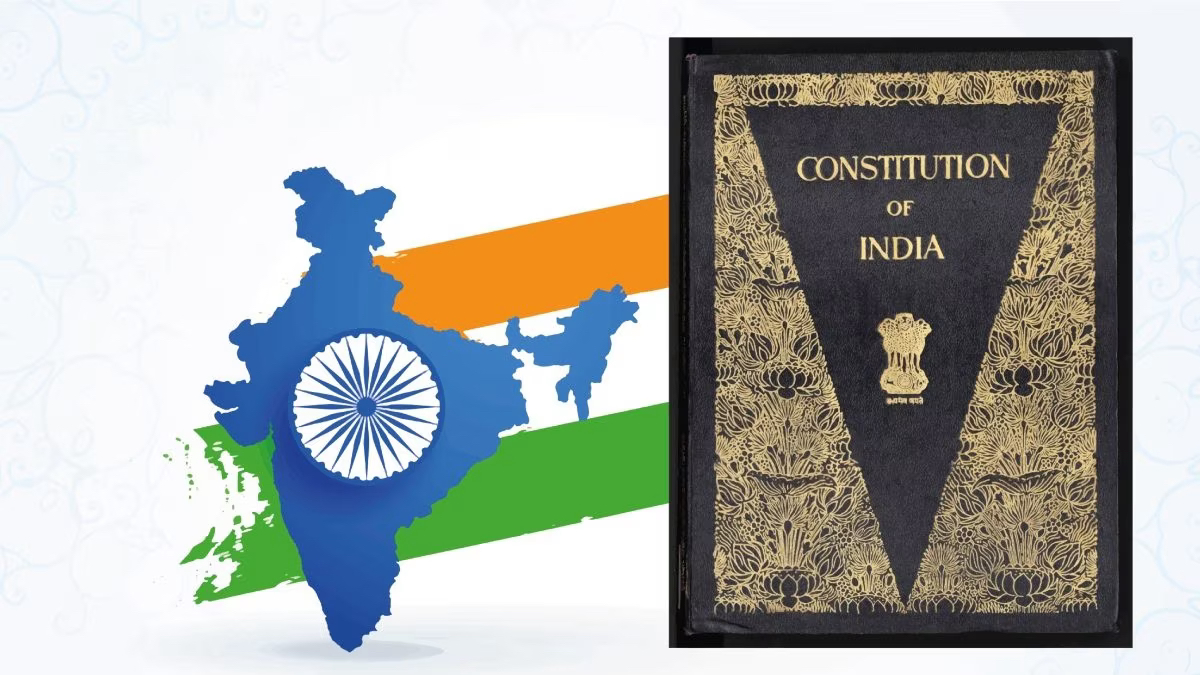
- 12 Jan 2024
Why is it in the News?
In a recent observation, the Supreme Court, headed by Chief Justice of India D Y Chandrachud, highlighted that the right granted to religious and linguistic minorities to establish and administer their educational institutions under Article 30(1) of the constitution was not intended to "ghettoise" them.
What is Article 30 of the Indian Constitution?
- Article 30 of the Indian Constitution states the right of minorities to establish and administer educational institutions.
- It says: “All minorities, whether based on religion or language, shall have the right to establish and administer educational institutions of their choice.”
When was Article 30 adopted?
- Article 30 was adopted on December 8, 1948.
Features of Article 30 of the Indian Constitution:
- Article 30 of the Indian constitution consists of provisions that safeguard various rights of the minority community in the country keeping in mind the principle of equality as well.
- Article 30(1) says that all minorities, whether based on religion or language, shall have the right to establish and administer educational institutions of their choice.
- Article 30(1A) deals with the fixation of the amount for the acquisition of property of any educational institution established by minority groups.
- Article 30(2) states that the government should not discriminate against any educational institution on the ground that it is under the management of a minority, whether based on religion or language while giving aid.
The debate around Article 30:
- On December 8, 1948, the Constituent Assembly debated the need for imparting primary education in one's mother tongue.
- One of the members of the Assembly moved an amendment to restrict the scope of this article to linguistic minorities.
- He argued that a secular state should not recognise minorities based on religion.
- Another member of the Assembly proposed to guarantee linguistic minorities the fundamental right to receive primary education in their language and script.
- He was concerned about the status of minority languages, even in regions which had a significant minority population.
- The Constituent Assembly rejected the proposals.
What is Article 29 of the Indian Constitution?
- Both Article 29 and Article 30 guarantee certain rights to minorities.
- Article 29 protects the interests of minorities by making a provision that any citizen/section of citizens having a distinct language, script or culture has the right to conserve the same.
- Article 29 mandates that no discrimination would be done on the grounds of religion, race, caste, language or any of them.
Concept of Minority in the Indian Constitution:
Religious minorities:
- While Article 30 and Article 29 of the Constitution do not specify 'minorities' in India, it is classified into religious minorities and linguistic minorities.
Religious Minorities in India:
- The basic ground for a community to be nominated as a religious minority is the numerical strength of the community.
- For example, in India, Hindus are the majority community.
- As India is a multi-religious country, it becomes important for the government to conserve and protect the religious minorities of the country.
- Section 2, clause (c) of the National Commission of Minorities Act, declares six communities as minority communities. They are:
- Muslims
- Christians
- Buddhists
- Sikhs
- Jains and
- Zoroastrians (Parsis)
Linguistic Minorities:
- A class or group of people whose mother language or mother tongue is different from that of the majority groups is known as the linguistic minority.
- The Constitution of India protects the interests of these linguistic minorities.
Swachh Survekshan Awards 2023 | Surat, Indore are the cleanest cities (The Hindu)
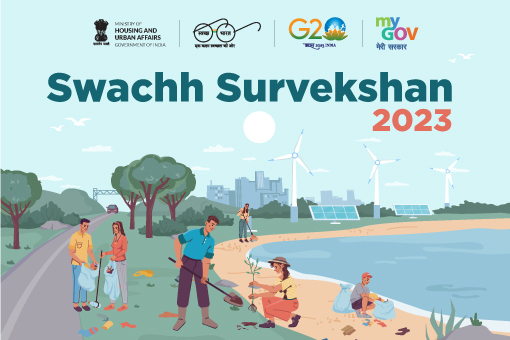
- 12 Jan 2024
Why is it in the News?
The President of India recently presented the ‘Swachh Survekshan Awards 2023’ at Bharat Mandapam in New Delhi.
What is Swachh Survekshan?
- Conducted annually, Swachh Survekshan is a comprehensive evaluation of cleanliness, hygiene, and sanitation standards in cities and towns throughout India.
- This initiative was launched as an integral component of the Swachh Bharat Abhiyan, specifically falling under the urban segment (SBA-Urban).
- Initiated by the Ministry of Housing and Urban Affairs (MoHUA), the survey is executed in collaboration with the Quality Council of India (QCI).
- The Swachh Bharat Abhiyan, launched on October 2, 2014, aims to achieve cleanliness and the eradication of open defecation in India by October 2, 2019.
- The campaign is bifurcated into rural (SBA-Gramin, overseen by the Department of Drinking Water and Sanitation under the Ministry of Jal Shakti) and urban (SBA-Urban, supervised by MoHUA).
- Recently, on October 1, 2021, SBM-U 2.0 was introduced, focusing on ensuring universal access to sanitation facilities. Within this framework, the vision of attaining a Garbage-Free India has been emphasized.
- Commencing with the first survey in 2016, covering 73 cities, Swachh Survekshan has expanded significantly to encompass 4242 locations in the 2020 survey.
- The evaluation methodology centres on two primary criteria: citizen feedback and field assessment.
- Objectives of Swachh Survekshan: The primary goal of Swachh Survekshan is to encourage large-scale citizen participation and create awareness amongst all sections of society about the importance of working together towards making towns and cities better places to reside in.
About Swachh Survekshan Awards 2023:
- Swachh Survekshan Awards 2023 were presented by President Droupadi Murmu at Bharat Mandapam, New Delhi, under the auspices of the Ministry of Housing and Urban Affairs (MoHUA).
- The theme for the year 2023 centred around "Waste to Wealth" emphasizing sustainable waste management practices.
- For 2024, the theme is “Reduce, Reuse and Recycle”.
- Indore (Madhya Pradesh) and Surat (Gujarat) jointly clinched the title of the cleanest cities in the country, with Navi Mumbai (Maharashtra) securing the third position.
- Remarkably, Indore maintained its top-ranking status for the seventh consecutive year.
- In the category of clean cities with a population of less than 1 lakh, Sasvad, Patan, and Lonavala secured the top three positions, while Madhyamgram, Kalyani, and Haora in West Bengal found themselves at the bottom.
- The cleanest cantonment was declared as Mhow Cantonment Board in Madhya Pradesh, and Chandigarh earned the SafaiMitra Surakshit Sheher recognition.
- In the Ganga Towns category, Varanasi and Prayagraj secured the first and second positions, respectively.
- Acknowledging overall cleanliness efforts, Maharashtra claimed the title of the best-performing state, followed by Madhya Pradesh and Chhattisgarh in the second and third positions.
- Odisha secured the fourth spot, with Telangana, Andhra Pradesh, Punjab, Gujarat, Uttar Pradesh, Tamil Nadu, Sikkim, Karnataka, Goa, Haryana, and Bihar following suit.
- Conversely, Rajasthan, Mizoram, and Arunachal Pradesh found themselves at the lower end of the ranking.
Govt’s ZED scheme for MSMEs hits 1 lakh certification milestone; check scheme’s details (Financial Express)
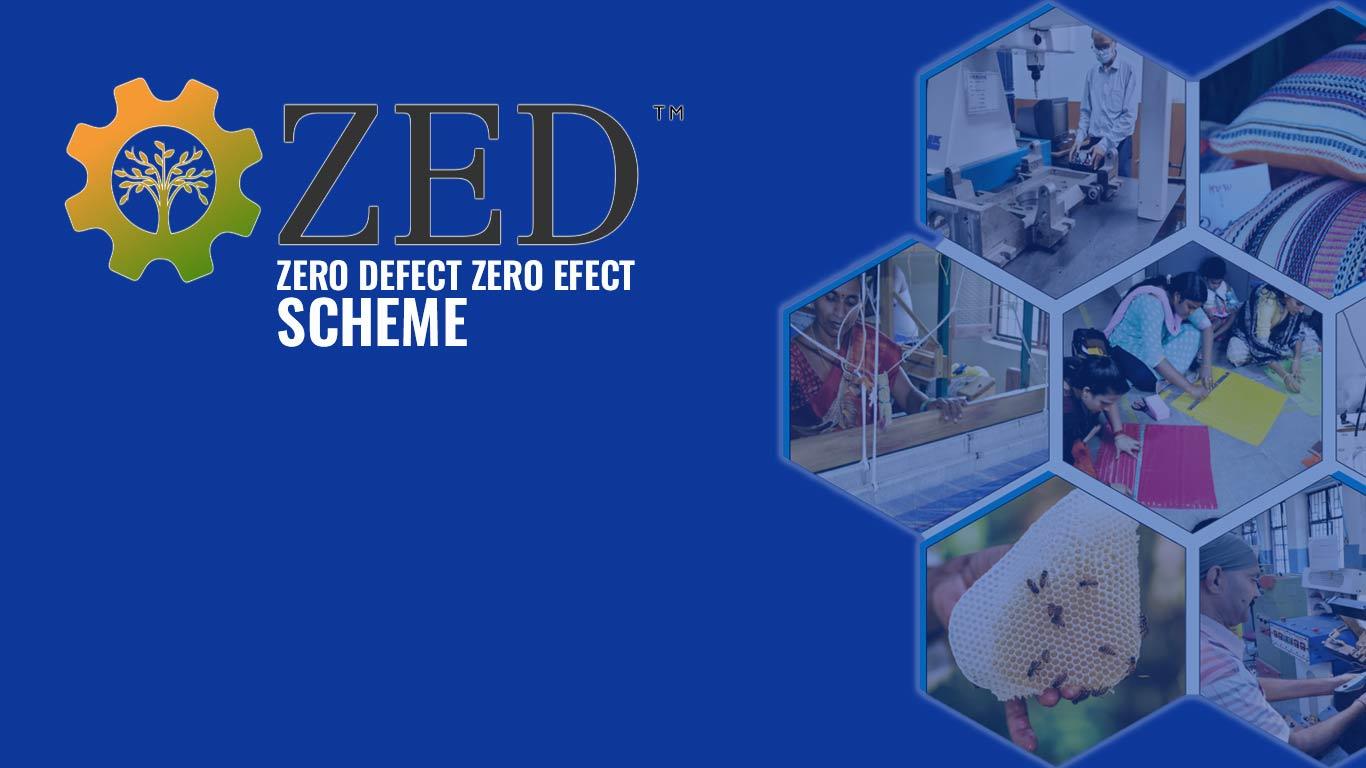
- 12 Jan 2024
Why is it in the News?
The Zero Effect, Zero Defect scheme (ZED) by the MSME Ministry, which aims to encourage environmentally sustainable manufacturing practices among MSMEs, has achieved the 1 lakh certification milestone
What is the Zero Effect, Zero Defect (ZED) Scheme?
- Launched in October 2016 and revamped in April 2022, the ZED scheme offers certification for environmentally conscious manufacturing under three certification levels (gold, silver and bronze) classified according to 20 performance-based parameters such as quality management, timely delivery, process control, waste management, etc.
- The scheme provides financial assistance of up to 75 per cent of the total cost of certification, with a maximum subsidy ceiling of Rs 50,000 along with up to Rs 2 lakh support for handholding/consultancy to achieve the next certification level.
- For technology upgradation, the scheme offers assistance of up to Rs 3 lakhs for moving towards zero effect solutions/pollution control measures/cleaner technology.
- MSMEs are charged Rs 10,000 for bronze certification, Rs 40,000 for silver certification, and Rs 90,000 for gold certification.
- In December 2023, the MSME Ministry made the ZED scheme free for women-led MSMEs.
- In addition, the government will now make a guaranteed payment of 100 per cent financial support for the certification cost under the scheme.
- The ZED certification is valid for three years and the MSME units are required to re-apply for the certificate as per the validity of the scheme.
- Currently, the scheme is applicable for manufacturing MSMEs only.
- The government hasn’t announced the scheme’s model for services MSMEs yet.
- The scheme is in line with the government’s plan to reduce the country’s CO2 emissions by 1 billion tons by 2030, reduce carbon intensity below 45 per cent by 2030 and finally make way for achieving a Net-Zero emission target by 2070.
- The ZED Certification envisages the promotion of Zero Defect Zero Effect (ZED) practices amongst MSMEs so as to:
- Encourage and enable MSMEs to manufacture quality products using the latest technology, and tools & to constantly upgrade their processes for the achievement of high quality and high productivity with the least effect on the environment.
- Develop an Ecosystem for ZED Manufacturing in MSMEs, to enhance competitiveness and enable exports.
- Promote the adoption of ZED practices and recognise the efforts of successful MSMEs.
- Encourage MSMEs to achieve higher ZED Certification levels through graded incentives.
- Increase public awareness of demanding Zero Defect and Zero Effect products through the MSME Sustainable (ZED) Certification.
- Identify areas to improve upon, thereby assisting the Government in policy decisions and investment prioritization.
Mamata asks PM to officially list Bengali as a ‘classical language’ (The Hindu)
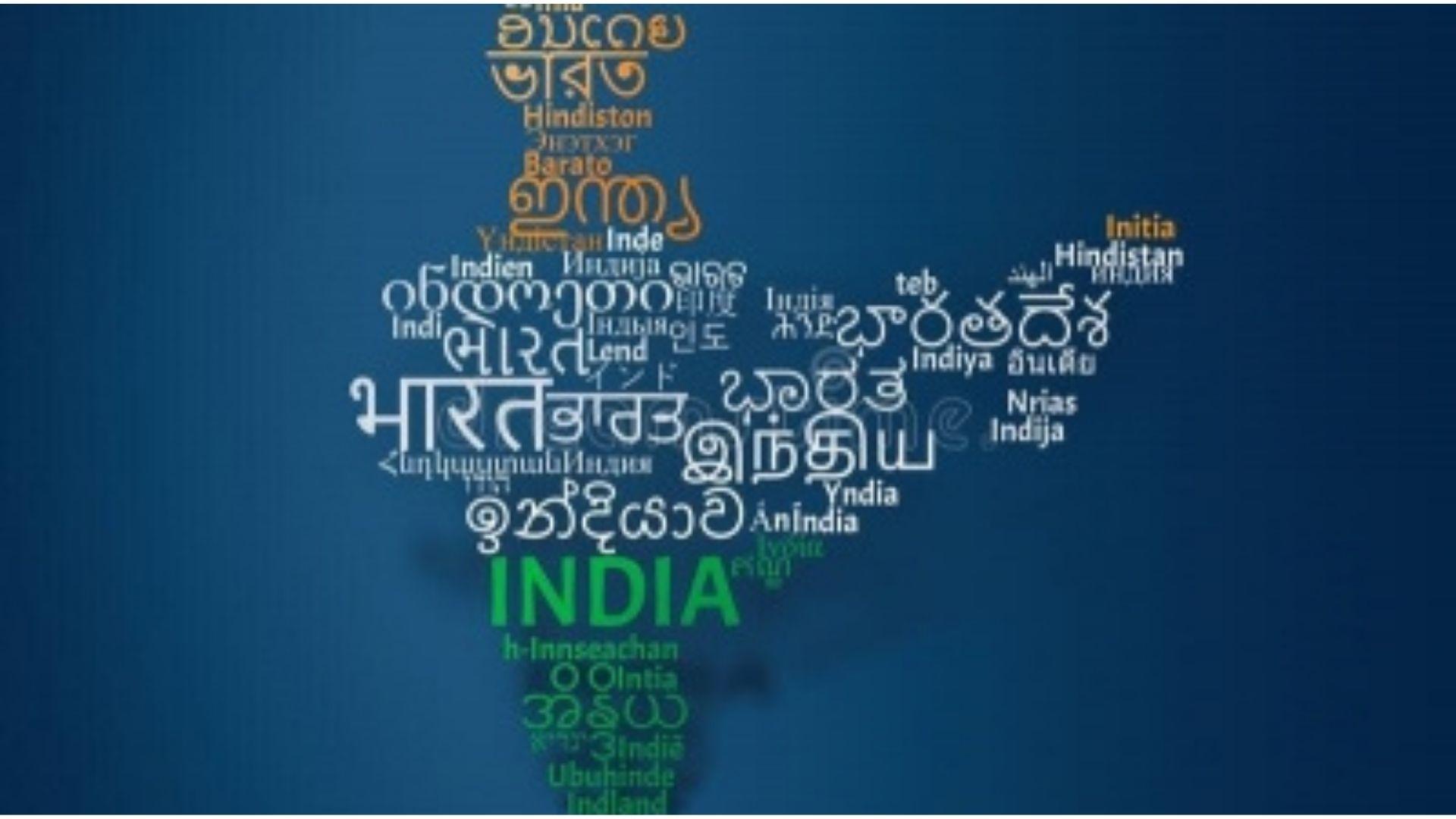
- 12 Jan 2024
Why is it in the News?
West Bengal Chief Minister Mamata Banerjee in a letter to Prime Minister Narendra Modi on Thursday asked the central government to officially list Bengali as a “classical language”
About the Classical Languages in India:
- The Ministry of Culture plays a significant role in providing guidelines concerning Classical languages.
- At present, six languages in India hold the status of 'Classical.'
- These include:
- Tamil (2004)
- Sanskrit (2005)
- Kannada (2008)
- Telugu (2008)
- Malayalam (2013) and
- Odia (2014)
- All these Classical Languages find a place in the Eighth Schedule of the Constitution.
The criteria for designating a language as 'Classical' encompass several key factors:
- Historical Significance: A language must boast high antiquity, with early texts or recorded history spanning 1500-2000 years.
- Rich Literary Heritage: The language should possess a substantial body of ancient literature or texts considered a valuable heritage by successive generations of speakers.
- Originality: The literary tradition of the language should be original, not borrowed from another speech community.
- Distinctive Identity: A Classical language and its literature must maintain a distinct identity from modern iterations, potentially featuring a discontinuity between the classical language and its later forms or derivatives.
Upon achieving Classical status, the Human Resource and Development Ministry extends various benefits to promote the language, including:
- International Recognition: Two significant annual international awards are instituted for scholars of eminence in classical Indian languages.
- Centers of Excellence: Establishing a dedicated Centre of Excellence for Studies in Classical Languages.
- Academic Support: Encouraging the University Grants Commission to initiate Professional Chairs for Classical Languages, particularly in Central Universities, to foster academic research and development.
The Bengali Language:
- Bengali serves as the official language of West Bengal and holds the same status in Bangladesh.
- It stands as the second most spoken language in India and ranks as the seventh most spoken language globally.
- As an Indo-Aryan language indigenous to the Bengal region of South Asia, Bengali employs a script derived from Brahmi, an ancient Indian script.
- Notably, Bengali is written from left to right.
World Employment and Social Outlook: Trends 2024 Report (The Hindu)

- 11 Jan 2024
Why is it in the News?
The global unemployment rate is set to increase in 2024 while growing social inequalities remain a concern, according to the International Labour Organisation’s (ILO) World Employment and Social Outlook: Trends 2024 report released in Vienna recently.
Key Findings:
- Employment Trends: Joblessness and the jobs gap have both decreased below pre-pandemic levels, but global unemployment is expected to rise in 2024.
- The macroeconomic environment witnessed a significant deterioration in 2023.
- Global Economic Challenges: Ongoing geopolitical tensions and persistent inflation led to frequent and aggressive actions by central banks.
- Monetary authorities in both advanced and emerging economies implemented the fastest interest rate increases since the 1980s, with widespread global repercussions.
- Economic Slowdown in Key Economies: China, Türkiye, and Brazil experienced notable slowdowns, adversely affecting global industrial activity, investment, and trade.
- Despite the economic slowdown, global growth in 2023 surpassed expectations, and labour markets displayed unexpected resilience.
- Unemployment Dynamics: The global unemployment rate in 2023 improved modestly to 5.1% compared to 2022.
- Labour market participation rates largely recovered from pandemic lows, but concerns arise about structural imbalances persisting.
- Wage Trends: Real wages declined in most G20 countries as increases failed to keep pace with inflation.
- Workers living in extreme poverty (earning less than US$2.15 per day per person in PPP terms) increased by about one million globally in 2023.
- Positive real wage growth was observed in China, the Russian Federation, Mexico, India, and Türkiye.
Recommendations As per the Report:
- Inclusive Labor Policies: Policymakers in rapidly ageing countries should focus on supporting the participation of groups with weak labour market attachment, including youth, women, and older workers.
- Investment and Skills Strategies: Investment and skills policies should aim to enhance productivity, and potential growth, and promote a more productive utilization of technological progress.
- Sectoral Improvements: Motivating workers who leave due to low pay and challenging working conditions can be achieved by improving conditions in sectors and occupations with these challenges.
- International Workforce Matching: Facilitating the matching of internationally mobile workers to suitable jobs could alleviate some of the shortages in the labour market.
- Long-Term Engagement: Recognizing that structural challenges in labour market adjustment are unlikely to vanish in the short term, it is crucial for governments and social partners to engage in ongoing efforts to address these challenges.
International Labour Organization (ILO)
- The International Labour Organization (ILO) stands as the United Nations agency dedicated to the world of work.
- Mission: The core mission of the ILO is to promote social and economic justice by establishing and advancing international labour standards.
- Motto: At the heart of the ILO's mission is the pursuit of Decent Work for all, encapsulating the commitment to fostering conditions that are fair and dignified.
- Headquarters: Situated in Geneva, Switzerland, the ILO operates from its global headquarters.
- Parent Organization: Functioning under the Economic and Social Council of the United Nations, the ILO is a vital component of the UN system.
- Additionally, it is a member of the United Nations Development Group (UNDP), collaborating with other UN organizations to achieve Sustainable Development Goals.
- Historical Background: Established in 1919 under the Treaty of Versailles, following the conclusion of World War I, the ILO was conceived with the conviction that enduring and universal peace could only be realized through a foundation of social justice.
- In 1946, it transitioned into a specialized agency within the newly formed United Nations.
- Membership: The ILO boasts a diverse membership, with 187 member states, encompassing 186 out of the 193 UN member states along with the Cook Islands.
- Organizational Structure: Distinguishing itself as the only tripartite U.N. agency, the ILO brings together representatives from governments, employers, and workers of its 187-member states, fostering collaborative efforts in shaping global labour standards and policies.
The Process of Selecting Tableaux for the Republic Day Parade (Indian Express)
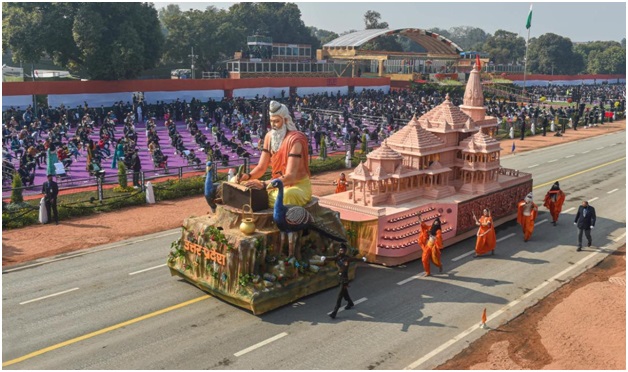
- 11 Jan 2024
Why is it in the News?
India’s Republic Day celebrations are incomplete without colourful tableaux cantering down the Kartavya Path (formally Rajpath). Showcasing India’s rich and diverse cultural heritage, they add colour to the grand event on January 26.
Who can send tableaux to the Republic Day parade?
- According to the Ministry of Defence (MoD), each year, a select number of “State Governments/UT Administrations/Central/Ministries/Departments” send their tableaux to the Republic Day parade.
- There is a rigorous application process which begins with interested parties submitting a concept note, along with design blueprints to the MoD.
How does the selection process work?
- The tableaux proposals received are evaluated by a committee of experts appointed by the MoD, comprising prominent persons in the fields of art, culture, painting, sculpture, music, architecture, choreography, etc. The selection process happens in a phased manner.
- STAGE 1 involves the assessment of the initial proposals and the design sketch/blueprint.
- The Committee sits alongside official representatives of the participants and suggests modifications, if necessary.
- A number of proposals may be rejected in this stage itself.
- STAGE 2 involves the assessment of three-dimensional models of the proposals.
- If the Committee is satisfied with the model, then the tableau is selected and further sent for fabrication.
- The Committee can also suggest changes to models before selection.
- Crucially, while the process is envisioned to be collaborative, the Committee has the final say on which tableaux are chosen, and can order any modifications they feel are required.
What is the basis of selection?
- Selection depends upon a combination of factors including but not limited to visual appeal, impact on the masses, idea/theme of the tableaux, degree of detailing involved in the tableaux, music accompanying the tableaux, local artists used etc.
- Each year, the MoD comes up with an overarching theme, under which, participants can showcase elements relevant to their respective state/UT/department in their tableaux.
- This year’s theme is “Viksit Bharat” (Developed India) and “Bharat: Loktantra ki Matrika” (India: the Mother of Democracy).
- The Defence Ministry also shares the basic guidelines about what all the tableaux can or should include.
- The participating entities must engage “young qualified designers from renowned institutions”, electronic display walls for a bright display of images or content, moving elements using robotics or mechatronics, 3D printing could be used for certain elements, use of augmented or virtual reality, and special effects to improve the optics and visual effects of the tableau.
- Extra weightage is given to tableaux which conform to these guidelines.
- Importantly, the tableaux of two different states/ UTs must not be too similar, and eco-friendly materials must be used for their construction.
'Report Fish Disease' to Monitor Fish Diseases (TOI)
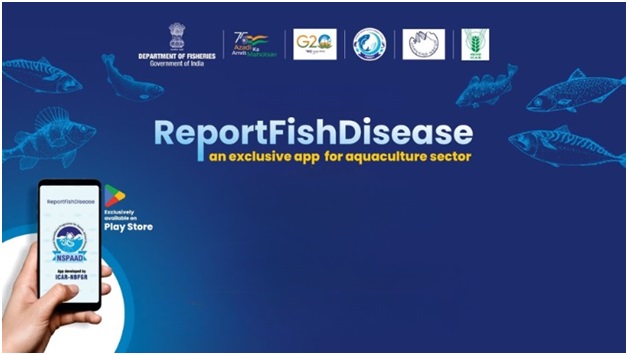
- 11 Jan 2024
Why is it in the News?
A mobile app titled ‘Report Fish Disease’ has been introduced to help aquaculture farmers to report diseases on their farms.
What is the 'Report Fish Disease' App?
- The mobile application is designed to empower fish farmers by offering a convenient and effective platform for reporting diseases on their farms.
- Developed as part of the NSPAAD project, with the lead institute being ICAR-NBFGR and a collaborative partnership with the Central Institute of Fisheries Technology (CIFT), this app brings a host of features and benefits.
Key Features:
- User-Friendly Interface: The app provides fish farmers with an intuitive and user-friendly interface, ensuring easy accessibility.
- Efficient Disease Reporting: A simplified reporting format allows farmers to easily report disease outbreaks by providing essential information such as location, affected species, observed symptoms, and images.
Significance:
- Swift Response through Geo-tagging: Utilizing geo-tagging technology, the app facilitates a rapid response from authorities.
- Farmers receive real-time updates on the status of their reported cases, ensuring transparency and accountability in disease management.
- Information Hub: Beyond reporting, the app serves as an information hub, offering farmers valuable resources on disease prevention, treatment, and best aquaculture practices.
- Comprehensive Disease Management: The app is a comprehensive package aimed at diagnosing, preventing, controlling, and treating aquatic animal diseases.
- It provides solutions to encourage aquaculture farmers to maintain the health of their stocks.
Anticipated Impact:
- By transforming disease management in aquaculture, the app aims to enhance the sustainability and productivity of this critical sector.
- It achieves this through early disease detection, data-driven decision-making, capacity building, and efficient resource allocation.
The ultimate goals of the app include:
- Improved Livelihood: Enhancing the livelihood of fish farmers through proactive disease management.
- Food Security: Safeguarding the nation’s food security by ensuring the health and well-being of aquatic animal stocks.
- Industry Growth: Contributing to the sustainable growth of the aquaculture industry by fostering a proactive approach to disease prevention and management.
Henley Passport Index 2024 (Indian Express)
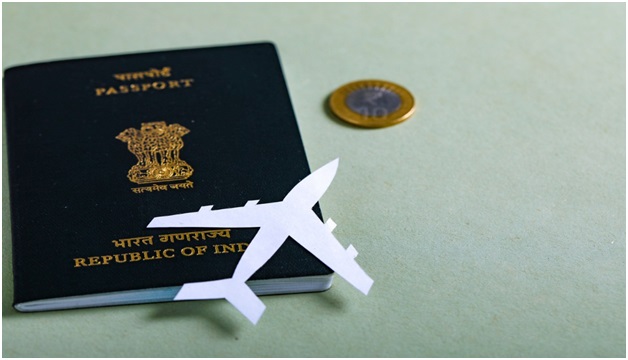
- 11 Jan 2024
Why is it in the News?
The Henley Passport Index, which ranks the world’s most travel-friendly passports, has released its list for 2024, with European nations of France, Germany, Italy and Spain, and Asia’s Japan and Singapore sharing the number one spot.
Highlights of Henley Passport Index 2024:
- The Henley Passport Index for 2024 ranks different passports according to the number of destinations their holders can visit without a prior visa or can avail of a visa on arrival, a visitor’s permit, or an electronic travel authority (ETA) on entering the destination.
- The rankings are based on the analysis of data provided by the International Air Transport Association (IATA).
- It then provides a ‘Visa-free score’ which, essentially, is the number of destinations that the holders of that particular passport can travel to without a prior visa or can avail of a visa on arrival or other similar permits.
- For instance, those holding the passports of the countries in the #1 spot had access to 194 visa-free destinations while those holding the Afghanistan passport ranked last at #104, had visa-free access to only 28 of them.
- As per the latest rankings, France, Germany, Italy, Japan, Singapore, and Spain hold the top spot as the world's most powerful passports, allowing visa-free entry to 194 global destinations.
- Finland, Sweden and South Korea shared the second rank, while Austria, Denmark, Ireland and Netherlands occupied the third spot.
- India, meanwhile, has improved its ranking and moved up to the 80th position from the previous year’s ranking of 84.
- Those holding an Indian passport have visa-free access to 62 destinations.
- World’s least powerful passports:
- Afghanistan (Score: 28) - visa-free access to only 28 destinations
- Syria (Score: 29) - visa-free access to only 29 destinations
- Iraq (Score: 31) - visa-free access to only 31 destinations
- Pakistan ( (Score: 34) - visa-free access to only 34 destinations
About Henley Passport Index:
- The Henley Passport Index is the original, authoritative ranking of all the world’s passports according to the number of destinations their holders can access without a prior visa.
- The index is based on exclusive data from the International Air Transport Association (IATA) – the largest, most accurate travel information database – and enhanced by Henley & Partners’ research team.
- It started in 2006 as the Henley & Partners Visa Restrictions Index (HVRI).
- The Henley Passport Index compares the visa-free access of 199 different passports to 227 travel destinations.
Carbon Border Adjustment Mechanism (CBAM) (Indian Express)
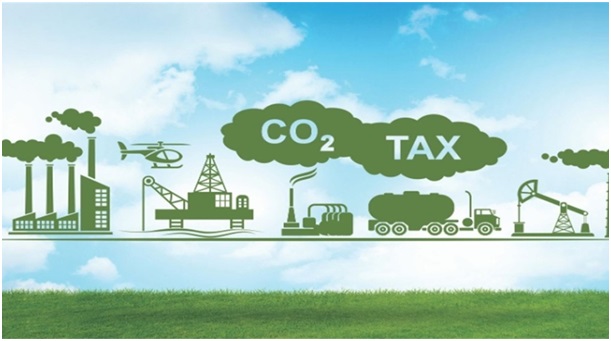
- 11 Jan 2024
Why is it in the News?
Recently India has flagged concerns relating to sensitive and confidential trade data of its exporters getting compromised while complying with the European Union’s Carbon Border Adjustment Mechanism (CBAM).
What Is Carbon Border Adjustment Mechanism (CBAM)?
- CBAM is a policy tool introduced by the European Union (EU) to reduce carbon emissions by imposing a carbon tax on imported products, ensuring that they are subject to the same carbon costs as products produced within the EU.
- It is part of the EU's "Fit for 55 in 2030 package" to reduce greenhouse gas emissions by at least 55% by 2030 compared to 1990 levels.
- The aim of CBAM is to prevent carbon-intensive imports from undermining the EU's climate objectives and to encourage the adoption of cleaner production practices around the world.
- To implement CBAM, importers will need to declare the quantity of goods imported and their greenhouse gas emissions on an annual basis.
- They will need to surrender a corresponding number of CBAM certificates to offset these emissions, and the price of these certificates will be based on the weekly average auction price of EU Emission Trading System (ETS) allowances in Euro/tonne of CO2 emitted.
- It encourages non-EU countries to adopt stricter environmental regulations, reduce global carbon emissions, and prevent carbon leakage by discouraging companies from moving to countries with weaker environmental regulations.
- Additionally, the revenue generated from CBAM will be used to support EU climate policies, which can serve as an example for other countries to promote green energy.
Impact of CBAM on India:
- The EU's carbon border adjustment mechanism will have a negative impact on India's exports of metals such as iron, steel, and aluminium products.
- The mechanism will subject these exports to extra scrutiny and impose carbon levies ranging from 19.8% to 52.7%, which could threaten India's major exports to the EU.
- From 1st January 2026, the EU will start collecting the carbon tax on each consignment of steel, aluminium, cement, fertilizer, hydrogen and electricity, which could further harm India's exports to the EU.
- The high carbon intensity of Indian products, due to coal being the dominant energy source, is a concern for the country as it may result in higher carbon tariffs from the EU.
- India's use of coal is much higher than the EU and the global average, with coal-fired power accounting for almost 75% of India's energy consumption.
- This makes direct and indirect emissions from industries like iron, steel and aluminium a significant worry for India.
- The lack of a domestic carbon pricing scheme in India poses a risk to its export competitiveness, particularly for sectors such as refined petroleum products, organic chemicals, pharma medicaments, and textiles, which are among the top 20 goods imported by the EU from India.
- Countries with a carbon pricing system may have a competitive advantage as they may pay less carbon tax or receive exemptions.
- This risk could expand to other sectors in the future.
What can be done?
- India can take a multi-pronged approach to mitigate the impact of the EU's Carbon Border Adjustment Mechanism (CBAM) on its exports.
- One of the ways is to implement a Decarbonization Principle, which refers to reducing or eliminating greenhouse gas emissions from human activities such as transportation, power generation, manufacturing, and agriculture.
- The government could complement its existing schemes such as the National Steel Policy and the Production Linked Incentive (PLI) scheme with a Decarbonization Principle.
- This would encourage industries to focus on carbon efficiency, making their products more competitive in a carbon-conscious world.
- Another way is to negotiate with the EU to recognize its energy taxes as equivalent to a carbon price.
- India could also negotiate with the EU to transfer clean technologies and financing mechanisms to aid in making India's production sector more carbon efficient.
- One way to finance this is to propose that a portion of the EU's CBAM revenue could be set aside to support India's climate commitments.
- Additionally, India could begin preparing for the new system by establishing a Carbon Trading System, as China and Russia do.
- India can encourage sustainable and eco-friendly production by providing incentives, which will enable the country to stay competitive in a more carbon-conscious future while achieving its 2070 Net Zero Targets. This will help India pursue its developmental goals and economic aspirations without any compromise.
DRDO anti-drone tech ready, handed over to BEL, private firms (The Hindu)
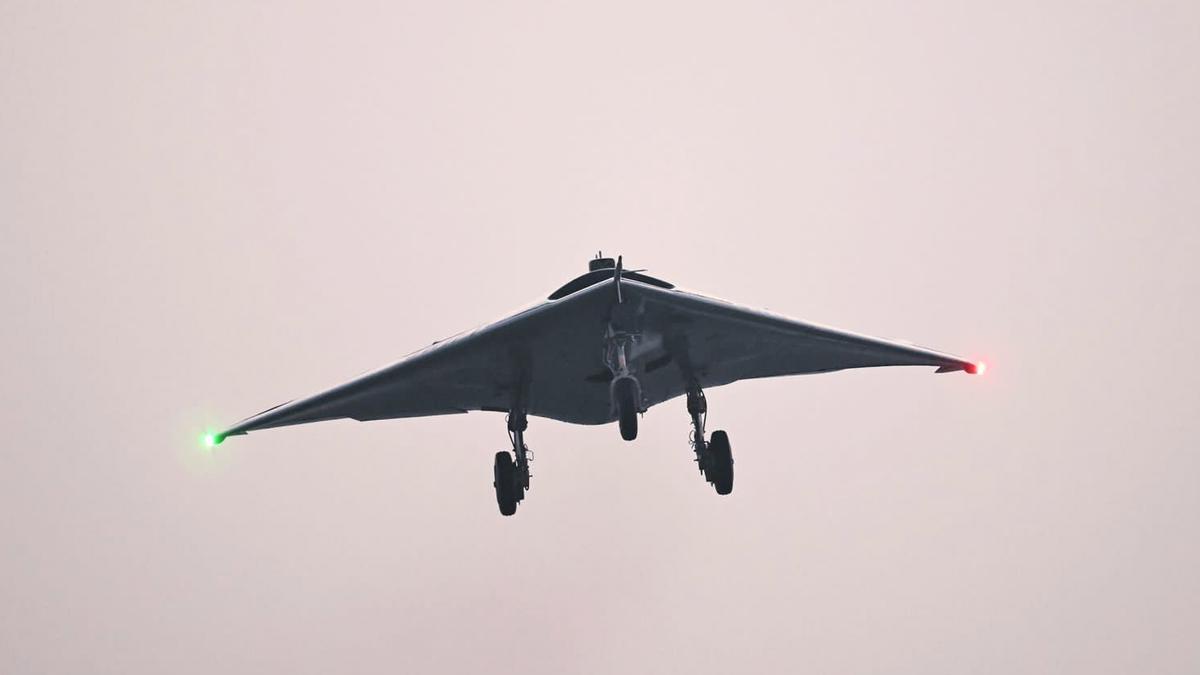
- 09 Jan 2024
Why is it in the News?
The counter-drone system developed by the Defence Research and Development Organisation (DRDO) is ready for production and has already been demonstrated to armed services and other internal security agencies with some orders already placed.
Key Highlights from the Report:
- The Defence Research and Development Organization (DRDO) has successfully engineered an indigenous counter-drone technology designed to counter various types of drone attacks, encompassing both soft and hard kill capabilities, particularly effective against micro drones.
- Significance: This cutting-edge system employs a laser-based kill mechanism for the detection and destruction of drones in the airspace.
- Notably, it can proficiently detect and disrupt micro drones within a range of 3 kilometres, employing laser signals to neutralize targets situated at distances between 1 to 2.5 kilometres.
- The technology has been seamlessly transferred to private industries, including Bharat Electronics Limited (BEL), Adani, Larsen & Toubro (L&T), and Icom.
- This strategic transfer enhances collaboration between the public and private sectors for the continued advancement and deployment of this crucial anti-drone technology.
What are Counter-Drone Systems?
- Counter-drone systems serve as defensive mechanisms designed to thwart potential drone attacks through the processes of detection, identification, and neutralization.
- These systems are broadly categorized as kinetic or non-kinetic.
- Kinetic Systems: Kinetic counter-drone systems employ projectiles, such as bullets or missiles, to destroy an intruding drone.
- They integrate advanced sensors like radar for drone detection, coupled with a motorized platform to precisely aim and fire the weapon.
- Non-Kinetic Systems: Non-kinetic counter-drone systems focus on disrupting flight capabilities or corrupting signals crucial for control and navigation.
- This is achieved by emitting noise signals at specific frequencies, rendering the drone incapable of receiving command signals.
- Additionally, non-kinetic systems may transmit false GPS signals, creating confusion in the drone's navigation system.
Centre asks Manipur government to study representation on removing Kuki-Chins from ST list (The Hindu)
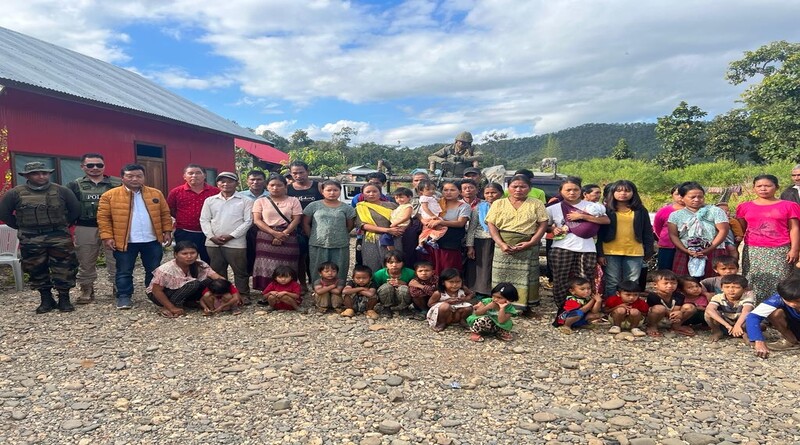
- 09 Jan 2024
Why is it in the News?
The Manipur government has been asked by the Centre to examine a representation seeking deletion of the “Nomadic Chin-Kuki” from the list of Scheduled Tribes in Manipur.
Context:
- The petition advocates that the primary criterion for categorizing Scheduled Tribes in the country should be based on Indigeneity, referencing a Supreme Court ruling dated January 2011.
- The petition specifically highlights the case of the "Zou" tribe, asserting that their origin in Myanmar's Chin state, a foreign territory, was not documented in pre-independence Indian Censuses.
- Consequently, the plea argues against the inclusion of the "Zou" tribe in the Scheduled Tribe list of Manipur.
About Kuki and Zomi Tribes:
- The Kuki-Zomi Tribes represent an ethnic group originating from the Bangladesh region, primarily residing in Manipur and Mizoram in India.
- Also recognized as Chin or Mizo people, they share a unified ancestry and culture.
- Their communication is conducted through various dialects within the Chin-Kuki-Mizo language family, belonging to the Tibeto-Burman branch of the Sino-Tibetan languages.
- The Kuki-Zomi Tribes are interconnected with the broader Zo people, alongside other tribes such as Chin and Mizo.
What is the Process of amendment in the ST List?
- The inclusion or exclusion of any tribe or tribal community from the Scheduled Tribes list is exclusively governed by legislation enacted by the Parliament of India.
- Amendments to the list are effectuated through notifications issued under clause (1) of Article 342, specifying Scheduled Tribes.
- According to a Supreme Court ruling, the authority to modify, amend, or alter the Scheduled Tribes list specified in the notification under Article 342(1) is not vested in State governments, courts, tribunals, or any other entity.
- Contrary to this, the central government asserts that the initiation of proposals for inclusion or exclusion from the ST list must originate from the respective State government.
- The Parliament then takes action based on this proposal.
- The Lokur Committee, in 1965, laid down the criteria employed by the government to designate communities as Scheduled Tribes, and these criteria persist in use today.
- They encompass primitive traits, distinctive culture, geographical isolation, shyness of contact with the larger community, and backwardness.
PM Modi wishes Indian diaspora on Pravasi Bharatiya Diwas (The Hindu)
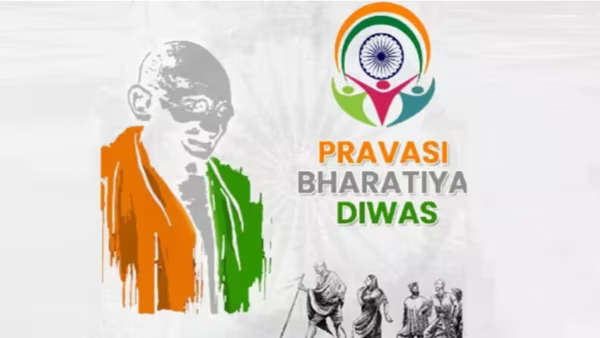
- 09 Jan 2024
Why is it in the News?
Prime Minister Narendra Modi has extended his wishes to the Indian diaspora on the Pravasi Bharatiya Diwas and said their dedication towards preserving our rich heritage and strengthening global ties is commendable.
What is Pravasi Bharatiya Diwas?
- Pravasi Bharatiya Divas (PBD), also known as Non-Resident Indian (NRI) Day, is celebrated on January 9 to mark the contribution and achievements of the overseas Indian community to the development of India.
- The day also commemorates the return of Mahatma Gandhi, the greatest Pravasi, from South Africa to India in 1915, who led India's freedom struggle and changed the lives of Indians forever.
- Its format was later revised in 2015 to celebrate the event once every two years and to hold theme-based conferences during the intervening period with participation from overseas diaspora experts, policy-makers, and stakeholders.
- The Pravasi Bharatiya Divas is the flagship event of the Ministry of External Affairs.
- It is held in different cities, to showcase the diversity and progress of different regions of India.
Pravasi Bharatiya Divas: History
- Pravasi Bharatiya Diva was first celebrated in 2003.
- It was an annual event earlier, but in 2015, the government revised its format to celebrate PBD once every two years.
- To date, 17 conventions have been held.
- The last Pravasi Bharatiya Divas was celebrated in the Indore of Madhya Pradesh in 2023.
Pravasi Bharatiya Samman Awards:
- Another aspect of the Pravasi Bharatiya Divas is the Pravasi Bharatiya Samman Awards.
- The awards were initiated in 2003 by the Indian Government to recognize the achievements and contributions of NRIs and PIOs in various fields such as education, science and technology, arts and culture, social work, public service, trade and industry, and philanthropy.
Pravasi Bharatiya Divas: Significance
- These conventions provide a platform for the overseas Indian community to engage with the Indian government and people of the land of their ancestors for mutually beneficial activities.
- These conventions are also very useful in networking among the overseas Indian community residing in various parts of the world and enable them to share their experiences in various fields.
: In a first, India set to chair, and host UNESCO's World Heritage Committee session in Delhi (HT)
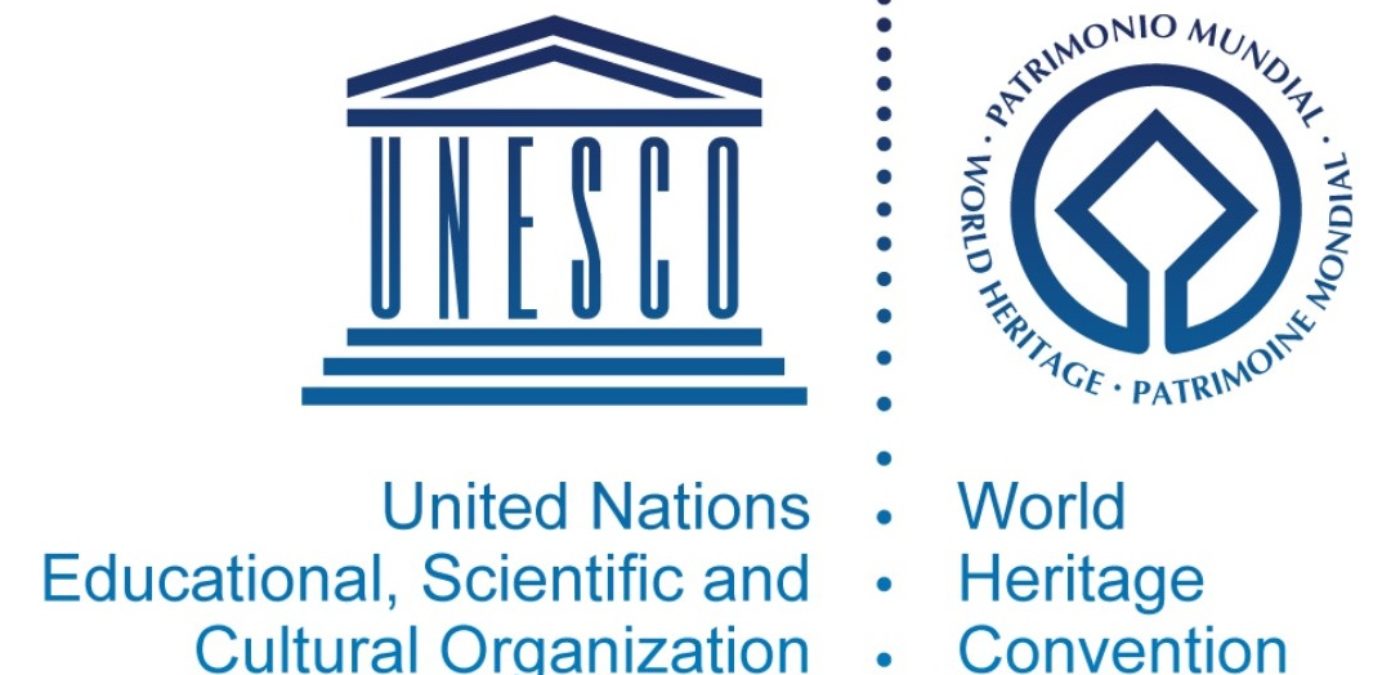
- 09 Jan 2024
Why is it in the News?
In a historic development, India is poised to chair and host UNESCO's World Heritage Committee session in New Delhi from July 21 to 31 this year, the Permanent Representative of India to UNESCO.
About the World Heritage Committee:
- The World Heritage Committee operates as a subsidiary of the United Nations Educational, Scientific, and Cultural Organization (UNESCO).
- Its primary responsibilities encompass executing the World Heritage Convention, determining the utilization of the World Heritage Fund, and disbursing financial assistance in response to requests from States Parties.
- The committee holds authoritative decision-making power regarding the inscription of properties on the World Heritage List, scrutinizes reports on the conservation status of listed properties, and prompts States Parties to rectify mismanagement issues.
- Additionally, it plays a pivotal role in determining the inclusion or removal of properties on the List of World Heritage in Danger.
- Structure:
- Comprising representatives from 21 States Parties elected by their General Assembly, the Committee operates with members serving six-year terms.
- However, many state parties opt for a four-year term voluntarily, allowing other state parties an opportunity to participate on the committee.
- Bureau of the World Heritage Committee:
- The Bureau, consisting of seven state parties elected annually by the Committee, includes a Chairperson, five Vice-Chairpersons, and a Rapporteur.
- This body is responsible for coordinating the Committee's activities, determining meeting schedules, and organizing the agenda.
What is UNESCO?
- The United Nations Educational, Scientific, and Cultural Organization (UNESCO) stands as a specialized agency within the United Nations (UN), dedicated to fostering global peace and security through collaborative efforts in education, arts, sciences, and culture.
- Established in 1945 as the successor to the League of Nations' International Committee on Intellectual Cooperation, UNESCO boasts a membership of 193 states and 11 associate members, along with partnerships in the non-governmental, intergovernmental, and private sectors.
- The organization is headquartered at the World Heritage Centre in Paris.
- UNESCO's foundational mission is to promote peace, sustainable development, and human rights by fostering cooperation and dialogue among nations.
- It pursues this overarching goal through five primary program areas: Education, Natural Sciences, Social/Human Sciences, Culture, and Communication/Information.
- The governance of UNESCO lies in the hands of the General Conference, comprising member states and associate members, convening biannually to establish the agency's programs and budget.
- The General Conference also elects members of the Executive Board, responsible for managing UNESCO's initiatives.
- Every four years, the Director-General is appointed by the General Conference to serve as the chief administrator of UNESCO.
- India has been a founding member of UNESCO, having ratified UNESCO’s Constitution on 4th November 1946.
The logic behind momentum investing (The Hindu)

- 10 Jan 2024
Why is it in the News?
Traditionally, experts have advised investors to buy assets when they are selling at low prices, such as during times of a financial crisis, as assets could be found selling at prices well below their intrinsic value. Momentum investing is in stark contrast to this traditional logic.
What is Momentum investing?
- Momentum investing refers to a style of investing wherein investors purchase assets such as stocks or bonds that are consistently rising in price while selling assets whose prices are falling.
- Momentum investors buy assets with rising prices in the hope that the upward price momentum of these assets would continue, thus allowing them to sell these assets at higher prices in the future to make profits.
- Similarly, they sell assets that are falling in price expecting the fall in prices to continue for some time.
- Momentum investing is based on the philosophy that there can be discernible trends in asset prices and that these trends tend to persist over time.
- The persistence of such trends gives investors an opportunity to recognise and participate in them early enough to make significant profits from their investments.
What is the Counter-logic?
- Momentum investors often invest money in assets whose prices have scaled new all-time highs, even if these assets are trading at prices that are far above their intrinsic value.
- Many academic studies have shown that momentum investing can generate high returns that comfortably beat the benchmark indices.
- Momentum investors generally do not conduct a deep analysis of the fundamental or intrinsic value of the assets in which they invest their money.
- They invest purely based on whether the price of an asset is showing a strong trend, either upward or downward, that they can ride on.
- For this reason, many critics argue that momentum investing can cause an unsustainable rise or fall in prices as momentum investors are blind to the actual value of these assets.
- This, they argue, can eventually lead to heavy losses for investors who are late to sell when the prices of these momentum-driven assets suddenly catch up with the assets’ intrinsic value.
- Some investors may combine value investing, which is based on assessing the intrinsic value of an asset, with momentum investing.
- These investors believe that taking into account the existing trend in the price of an asset can help save time and boost investment returns.
- It should be noted that traditional value investors believe in purchasing assets that are undervalued and selling them when the price of the asset has risen to match the asset’s intrinsic value.
- It might, however, take many years before the price of an asset rises to fully match its intrinsic value.
- Investors who combine value investing with momentum investing may be able to purchase an undervalued asset at just about the time when its price starts to trend towards its intrinsic value.
- This prevents investor money from being locked in for years in assets whose prices go nowhere.
Land Ports Authority Releases Report on Gender-Inclusive Framework for Cross-Border Trade in India (NewsOnAIR)
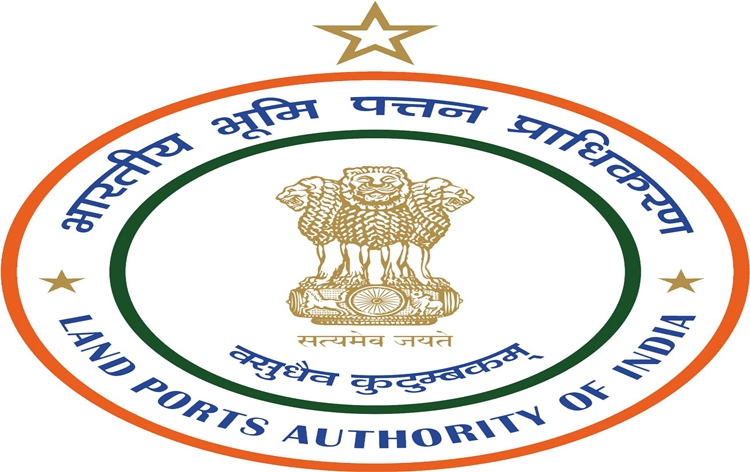
- 10 Jan 2024
Why is it in the News?
Land Ports Authority of India (LPAI) today released a report on 'Engendering Land Ports in India' in New Delhi. The main objective of the report is to develop a framework for gender-inclusive cross-border trade and tourism through land Ports in the country.
About the Land Ports Authority of India (LPAI):
- LPAI was established In 2012 as a statutory body under the LPAI Act of 2010.
- It comes under the purview of the Department of Border Management, Ministry of Home Affairs.
- Mandate: LPAI is entrusted with the development of cutting-edge infrastructure for its land ports.
- This infrastructure includes the construction of a Cargo Terminal Building, Passenger Terminal Building, deployment of mechanized equipment for cargo handling, implementation of security and surveillance measures at land ports, and the provision of forex counters.
- Growth: From its inception with just two land ports in 2012, LPAI has played a significant role in expanding India's operational land ports to 11, facilitating connections across the country's land borders with Bangladesh, Nepal, and Pakistan.
Land Ports in India:
- Integrated Check Posts (ICPs) are the official designations for land ports in India.
- The country currently boasts 11 operational land ports, namely Attari, Agartala, Dawki, Petrapole, Raxaul, Rupaidiha, Jogbani, Moreh, Sutarkandi, Srimantapur, and the Passenger Terminal Building (PTB) at Dera Baba Nanak.
- In the year 2023, significant trade activities were conducted through seven primary land ports: Attari, Agartala, Petrapole, Raxaul, Jogbani, Sutarkandi, and Srimantapur.
- These land ports played a crucial role in facilitating trade valued at Rs 76,000 crore and accommodating the movement of approximately 24 lakh passengers in the year 2023.
Why there is a Need for Land Ports in India?
- Given its strategic central location, India shares an extensive international land border spanning over 15,000 kilometres with seven South Asian countries: Afghanistan, Bangladesh, Bhutan, China, Myanmar, Nepal, and Pakistan.
- Numerous specified entry and exit points facilitate cross-border movements involving individuals, goods, and vehicles.
- However, the persistent challenge of inadequate infrastructure at these designated border checkpoints has posed a significant hurdle to regional trade, adversely affecting the smooth transit of both commodities and passengers.
- Recognizing this obstacle, the Committee of Secretaries recommended the establishment of Integrated Check Posts (ICPs) in 2003.
- These ICPs were envisioned to offer state-of-the-art infrastructure facilities, addressing the deficiencies in the existing border infrastructure and promoting more efficient cross-border interactions.
Launch of the Traditional Medicine Morbidity codes of Ayurveda, Siddha and Unani Chapter in International Classification of Diseases (ICD) 11 as Module 2 (PIB)

- 10 Jan 2024
Why is it in the News?
The launch event for Module 2 of the World Health Organization's International Classification of Diseases (ICD) 11 TM Morbidity Codes is scheduled to take place in New Delhi on January 10, 2024.
What is the International Classification of Diseases?
- Developed by the World Health Organization (WHO), the International Classification of Diseases (ICD) serves as a global standard for classifying diseases.
- The existing global data on diseases is primarily rooted in modern biomedicine practices, guiding diagnoses within healthcare systems worldwide.
- ICD plays a significant role on a global scale, offering crucial insights into the prevalence, causes, and consequences of human diseases and mortality.
- It achieves this by incorporating reported and coded data, forming the basis for clinical terms in health records and disease statistics across primary, secondary, and tertiary care, as well as cause-of-death certificates.
- The data and statistics derived from ICD coding contribute to various essential functions, including supporting payment systems, aiding in service planning, facilitating quality and safety administration, and driving health services research.
- Moreover, the standardized data collection associated with ICD categories allows for large-scale research initiatives.
- It's important to note that the WHO ICD series currently does not include the classification of data and terminology related to diseases based on Ayush systems such as Ayurveda, Siddha, Unani, etc.
- The Central Bureau of Health Intelligence (CBHI), operating under the Ministry of Health and Family Welfare, serves as the WHO Collaboration Centre for ICD-related activities.
- The CBHI plays a crucial role in collecting and disseminating data on various diseases and mortality.
What is the TM2 module of ICD11?
- The Ministry of Ayush has introduced the Code for Ayurveda, Siddha, and Unani Medicine, utilizing the National Ayush Morbidity and Standardised Electronic Portal (NAMASTE).
- In partnership with the World Health Organization (WHO), the Ministry of Ayush has collaboratively developed a comprehensive categorization of data and terminology about diseases based on Ayush systems, namely Ayurveda, Siddha, and Unani, within the TM2 module of the ICD11 series.
- Furthermore, the Ministry of Ayush has formalized this collaboration by signing a Donor Agreement with the World Health Organization for the implementation of these initiatives.
Autonomous systems becoming the preferred choice in Order of Battle for nations across the globe: Navy Chief (The Hindu)
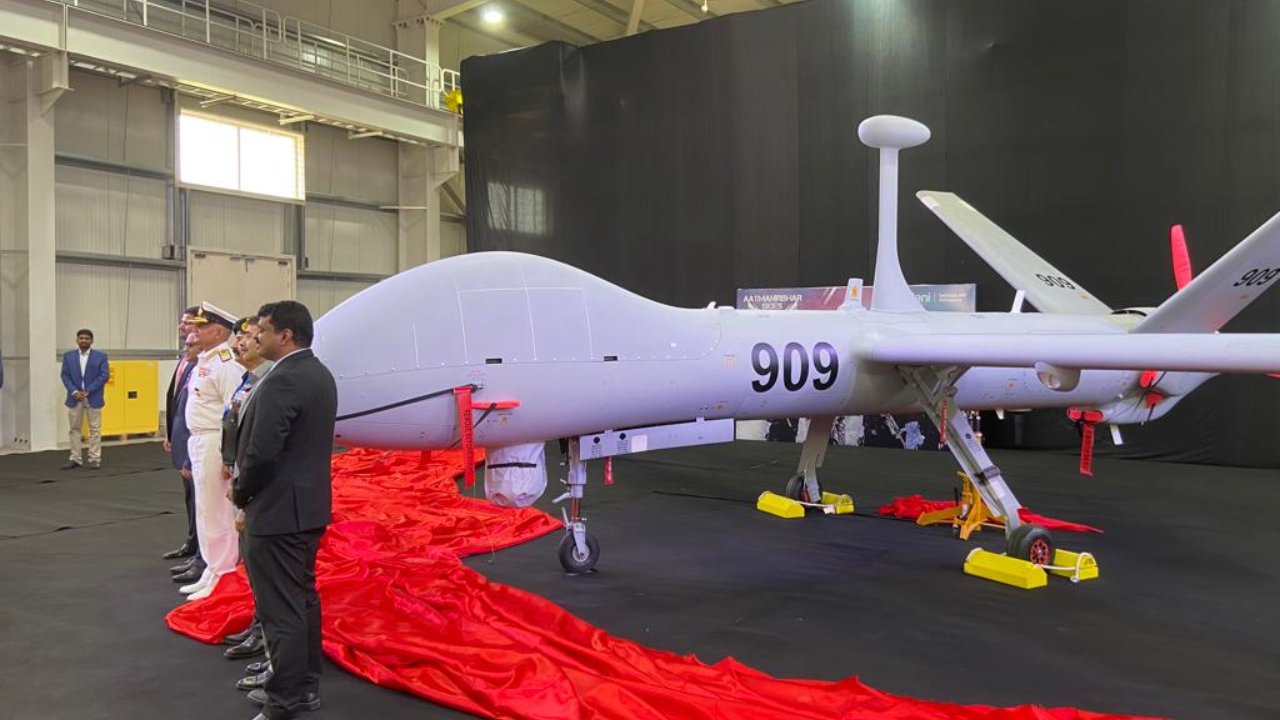
- 10 Jan 2024
Why is it in the News?
Chief of Naval Staff Admiral R Hari Kumar officially initiated the maiden indigenously produced Drishti 10 'Starliner' Unmanned Aerial Vehicle (UAV) for the Indian Navy.
What is Drishti 10 Starliner UAV?
- Drishti 10 Starliner Unmanned Aerial Vehicle is an advanced intelligence, surveillance, and reconnaissance (ISR) platform, developed by Adani Defence and Aerospace, and represents a significant leap forward in India’s defence technology.
- The Drishti 10 Starliner boasts an impressive 36 hours of endurance and a substantial 450 kg payload capacity.
- It stands out as the only all-weather military platform certified with NATO’s STANAG 4671 (standardized agreement 4671) for airworthiness, allowing it to operate in both segregated and unsegregated airspace.
- The UAV is equipped with state-of-the-art sensors, an extended endurance of 36 hours, and advanced communication capabilities.
- Its incorporation of new-age technologies such as Automatic Take Off and Landing (ATOL) positions it as a formidable asset.
- Notably, this UAV is a home-assembled version of the Hermes-900 MALE UAV, featuring an impressive 70% indigenous content.
- A notable feature of the Drishti 10 'Starliner' is its low maintenance demands, contributing to cost-effectiveness and operational efficiency.
- This quality enhances operational readiness, minimizing downtime and optimizing deployment opportunities.
- The Drishti 10 is outfitted with cutting-edge communication systems, encompassing satellite communication and Line-of-Sight (LOS) data links, guaranteeing dependable and secure data transmission.
What is Unmanned Aerial Vehicle (UAV)?
- A drone, also referred to as an unmanned aerial vehicle (UAV), is an aircraft that operates without a human pilot, crew, or passengers on board.
- UAVs are integral components of unmanned aircraft systems, comprising a ground-based controller and a communication system linked with the UAV.
Drones are categorized based on their weight, adhering to existing regulations:
- Nano: Equal to or less than 250 grams
- Micro: Between 250 grams and 2 kilograms
- Small: From 2 kilograms to 25 kilograms
- Medium: Between 25 kilograms and 150 kilograms
- Large: Exceeding 150 kilograms
Ram Temple opening brings fresh hope to Moradabad brass traders as orders for idols shoot up (The Hindu)
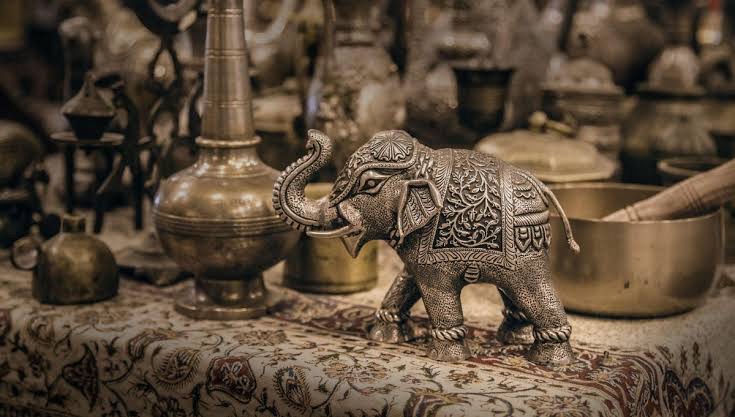
- 08 Jan 2024
Why is it in the News
The industry, which till now produced utensils and home decorative items with intricate designs, is now flooded with orders for idols of Ram, Sita, Laxman and Hanuman
Brassware Industry Moradabad:
- Moradabad was founded in 1600 by Murad, the son of Mughal Emperor Shahjahan, and hence became known as Moradabad.
- It is well-known for its brass work and has made a name for itself in the global handicraft market.
- Moradabad, often referred to as the "Brass City" or Peetal Nagri, exports brassware to countries like the US, Britain, Canada, Germany, the Middle East, and Asia.
- Brass, an alloy of copper and zinc, holds historical significance due to its exceptional hardness and workability.
- In the 1980s, the industry witnessed diversification with the introduction of various metal wares such as brass, iron, and aluminum.
- This expansion brought new technologies like electroplating, lacquering, and powder coating to Moradabad's art industry.
- Notably, Moradabad Metal Craft (Word Mark) has received a geographical indication (GI) tag, emphasizing its unique identity and craftsmanship.
- In the 18th century, Moradabad’s brass industry was boosted when the British East India Company began ordering large quantities of brass products for export.
- The demand for Moradabad’s brassware continued to grow throughout the 19th and 20th centuries, making it one of the most critical industries in the city.
What Categories of Brass are made in Moradabad?
Moradabad’s manufacturers produce a wide range of brass products, including:
- Brass utensils: It includes a variety of brass utensils, such as pans, kettles, and jugs.
- Brass lamps: Moradabad is also known for its brass lamps, which are used for decoration and lighting homes and businesses.
- Brass statues: Brass spiritual suppliers also produce a wide range of brass God idols, Goddess statues, and Home decor statues.
- Other brass products: In addition to the items mentioned above, Moradabad’s manufacturers also produce various other brass products, such as vases, ashtrays, candlesticks, and door knockers.
How AI can help detect cancer and why India’s biggest cancer treatment hospital is utilising it (Indian Express)

- 08 Jan 2024
Why is it in the News
Given the escalating cases of cancer, the shortage of specialists poses a significant challenge in curbing fatalities. To address this gap, Mumbai’s Tata Memorial Hospital (TMH), the biggest cancer hospital in India, is turning to artificial intelligence (AI).
Context:
- With the rising cancer cases, a notable challenge is the shortage of specialists, impacting efforts to reduce fatalities.
- To tackle this issue, Tata Memorial Hospital (TMH) in Mumbai, India, the country's largest cancer hospital, is embracing artificial intelligence.
- The hospital is leveraging deep learning to establish a Bio-Imaging Bank for cancer, employing AI to develop a tailored algorithm specific to cancer diagnosis.
What is the Role of AI in Cancer Detection and Treatment?
- Early Detection through Identification of Tissue Changes and Potential Malignancies: AI analyzes radiological and pathological images, learning from extensive datasets to recognize unique features associated with various cancers.
- This technology facilitates early detection by identifying tissue changes and potential malignancies.
- Predictive Models for Tumor Survival and Treatment Guidance: Comprehensive imaging generates longitudinal patient data, aiding in understanding behavior, treatment response, disease recurrence, and overall survival.
- AI and machine learning protocols utilize this data to develop predictive models for tumor survival and guide treatment aggressiveness.
- Avoiding Unnecessary Chemotherapy: The creation of a tumor image bank allows for the development of algorithms for different tumors, assessing treatment responses directly from images and avoiding unnecessary chemotherapy for predicted non-responders.
- Maintaining Diagnostic Quality while Decreasing Radiation Exposure: Tata Memorial Hospital has added data from 60,000 patients to the biobank over the past year.
- Using this data, AI successfully reduces radiation by enhancing images with AI algorithms, ensuring a significant decrease in radiation exposure to children without compromising diagnostic quality.
- Potential to Reduce Cancer Fatalities in the Future:
- AI is poised to play a transformative role in cancer treatment, particularly in mitigating fatalities in rural India.
- Its potential lies in tailoring treatment approaches based on diverse patient profiles, optimizing therapy outcomes.
- AI swiftly detects cancer, eliminating the need for extensive tests and enabling even general practitioners to diagnose complex cancers.
- This technology is set to significantly enhance precision in cancer solutions.
What is Bio-Imaging Bank?
- The overarching objective is to establish a robust repository incorporating radiology and pathology images intricately linked with clinical information, outcome data, treatment specifics, and additional metadata.
- This strategic design aims at facilitating the training, validation, and rigorous testing of AI algorithms.
- Functioning: In conjunction with creating the database, the project involves training and testing multiple AI algorithms using the accumulated data.
- It is tailored to address medically relevant tasks, including screening for lymph node metastases, nucleus segmentation and classification, biomarker prediction, and therapy response prediction.
- Institutions Involved: The multi-institutional project receives funding from the Department of Biotechnology and collaborates with IIT-Bombay, RGCIRC-New Delhi, AIIMS-New Delhi, and PGIMER-Chandigarh.
Sarbananda Sonowal to chair the First Inland Waterways Development Council Meeting to be held tomorrow in Kolkata (PIB)
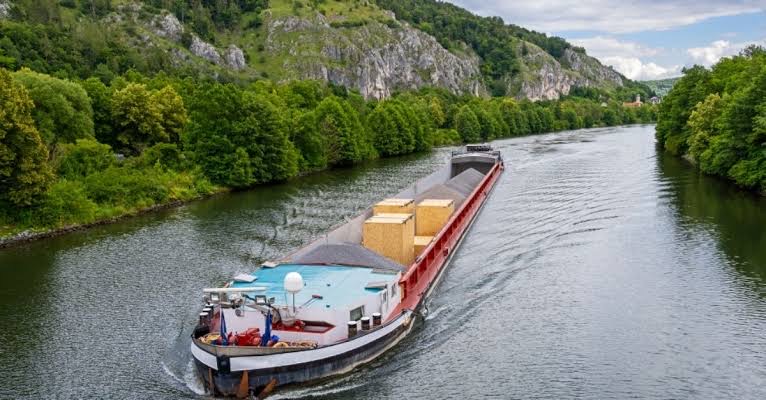
- 08 Jan 2024
Why is it in the News
The Inland Waterways Authority of India, under the Ministry of Ports, Shipping, and Waterways (MoPSW), is set to host the inaugural 'Inland Waterways Development Council' meeting on January 8, 2023, in Kolkata.
Key Initiatives to be Unveiled during the Meeting:
- Marking the first session of the Inland Waterways Development Council.
- The Inland Waterways Development Council (IWDC) meeting will address vital issues related to the advancement of inland waterways in India through a comprehensive agenda.
- Initiatives such as the “Harit Nauka – Guidelines for Green Transition of Inland Vessels” and the “River Cruise Tourism Roadmap 2047” will be launched as integral components of the agenda.
- The meeting will center on critical aspects like fairway development, private sector engagement, and enhancing cargo transport efficiency in Inland Water Transport (IWT).
- The agenda will also focus on promoting eco-friendly vessels for passenger transportation, exploring economic benefits in river cruise tourism, and advocating for sustainable practices in the development of inland waterways.
What is the Inland Waterways Development Council?
- The Government of India established the Inland Waterways Development Council in 2023 with the active aim of comprehensively developing inland waterways and the associated Inland Water Transport (IWT) ecosystem.
- The focus is on improving cargo efficiency, facilitating passenger movement, and promoting river cruise tourism, with the active engagement of States and Union Territories.
About Inland Waterways Authority of India (IWAI):
- The Inland Waterways Authority of India (IWAI) came into existence on 27th October 1986 for development and regulation of inland waterways for shipping and navigation.
- The Authority primarily undertakes projects for development and maintenance of IWT infrastructure on national waterways through grants received from the Ministry of Shipping.
- The head office of the Authority is at Noida.
- The Authority also has its regional offices at Patna, Kolkata, Guwahati and Kochi and sub-offices at Allahabad, Varanasi, Farakka, Sahibganj, Haldia, Swroopganj, Hemnagar, Dibrugarh, Dhubri, Silchar, Kollam, Bhubaneswar and Vijayawada.
From red ant chutney to black rice, the 7 Odisha products that have bagged GI tags (Indian Express)
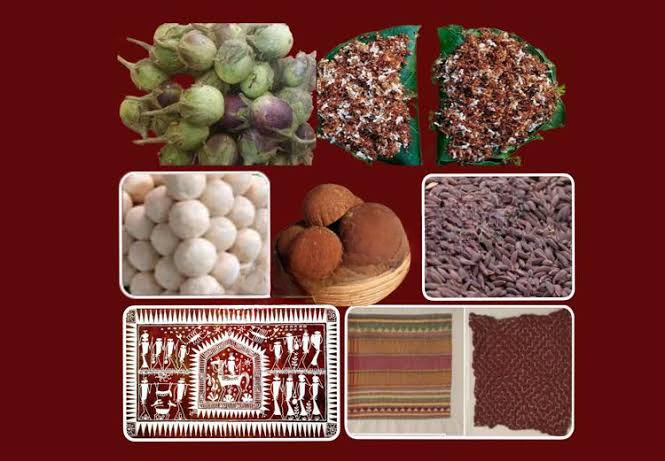
- 08 Jan 2024
Why is it in the News
Seven products from Odisha, ranging from the Similipal Kai chutney made with red weaver ants to the embroidered Kapdaganda shawl, have bagged the coveted Geographical Indication (GI) tag in recognition of their exclusivity to the state.
What is Geographical Indication (GI) Tag?
- Geographical Indications of goods refer to the place of origin of a product.
- Such tags are accorded as they convey an assurance of quality and distinctiveness, attributable to the fact of its origin in a specific geographical locality, region or country.
- In India, the Department for Promotion of Industry and Internal Trade, Ministry of Commerce and Industry, awards GIs.
- A GI registration is given to an area, not a trader, but once a product gets the registration, traders dealing in the product can apply to sell it with the GI logo.
- Authorised traders are each assigned a unique GI number.
- If any unauthorised trader tries selling the product under that name, they can be prosecuted under The Geographical Indications of Goods (Registration and Protection) Act, 1999.
- A marker of authentic products, the GI tags also help protect the interests of the local growers and artisans by preventing duplicity of the products and sale from unauthorised traders.
- Consumers, through the tags, can know which goods are certified.
The Seven Products and Their Distinctiveness:
- Kapdaganda shawl: Woven and embroidered by the women of the Dongria Kondh tribe, a particularly vulnerable tribal group (PVTG) in the Niyamgiri hills in Odisha’s Rayagada and Kalahandi districts, the shawl reflects the rich tribal heritage of the Dongria Kondhs.
- It is embroidered on an off-white coarse cloth with red, yellow and green coloured threads, with each colour holding significance.
- Green symbolises the mountains and hills, and yellow stands for peace and happiness.
- Red stands as the symbol of blood.
- The motifs in the shawls are mostly lines and triangles, believed to be a reflection of the importance of mountains for the community.
- The shawl is worn by both men and women and the Dongrias gift it to their family members as a token of love and affection.
- It is embroidered on an off-white coarse cloth with red, yellow and green coloured threads, with each colour holding significance.
- Lanjia Saura Painting: The painting is also known as Idital. The artworks are famous for their beauty, aesthetics, ritualistic association and iconography.
- The art form belongs to the Lanjia Saura community, a PVTG largely residing in the Rayagada district.
- These paintings are in the form of exterior murals painted on the mud walls of homes.
- White paintings figure over a crimson-maroon background.
- It is believed that the Lanjia Sauras paint their walls with Idital artworks to show gratitude to their deities and forefathers, and also for the well-being of their community.
- Reflecting the love and affection of the primitive tribes for nature, they feature subjects like tribal humans, trees, animals, birds, the Sun and the Moon.
- Koraput Kala Jeera Rice: The black-coloured rice variety, also known as the ‘Prince of Rice’, is famous for its aroma, taste, texture and nutritional value.
- Tribal farmers of the Koraput region have preserved the rice variety for around 1,000 years.
- As the rice grains resemble cumin seeds, it is also called Kala Jeera. Consumption of the rice variety helps in increasing haemoglobin levels and improves metabolism in the body.
- The farmers and producers of Koraput Kala Jeera rice have followed the traditional knowledge and practices in cultivation.
- Similipal Kai chutney: The chutney made with red weaver ants is a traditional delicacy of the tribals in Odisha’s Mayurbhanj district.
- The ants are found in the forests of Mayurbhanj, including in the Similipal forests – Asia’s second-largest biosphere.
- Rich in medicinal and nutritional value, the chutney is believed to be a good source of nutrients like protein, calcium, zinc, vitamin B-12, iron, magnesium, potassium, etc.
- The tribals prepare the Kai chutney by grinding the ants manually on a Sil Batta or the grinding stone.
- Mayurbhanj’s tribals also earn their livelihood by selling the red ants and the chutney made from the ants.
- They believe that its consumption helps boost immunity and prevents diseases.
- Nayagarh Kanteimundi Brinjal: Nayagarh Kanteimundi Brinjal is known for its prickly thorns on the stems and the whole plant.
- The green and round fruits contain more seeds as compared to other genotypes.
- It is famous for its unique taste and relatively short quick cooking time. The plants are resistant to major insects and can be grown with minimal pesticide.
- It is being widely cultivated in Nayagarh district of the state.
- Odisha Khajuri Guda: Odisha’s “Khajuri Guda” or jaggery is a natural sweetener extracted from date palm trees and has its origin in the Gajapati district.
- Traditionally, the jaggery is prepared in a trapezoidal form called ‘Patali Gur’ and is organic by nature.
- It is dark brown and has a unique taste.
- Dhenkanal Magji: Dhenkanal Magji is a type of sweet made from cheese from buffalo milk, with distinct characteristics in terms of appearance, taste, flavour, shape, and size.
- It also has unique nutritional values that distinguish it from other cheese-based sweets.
- The sweet is prepared by draining moisture from the cheese and then frying it, finally forming balls from the mixture.
‘Deep tech’ policy to be sent to Cabinet for approval, says scientific adviser (The Hindu)
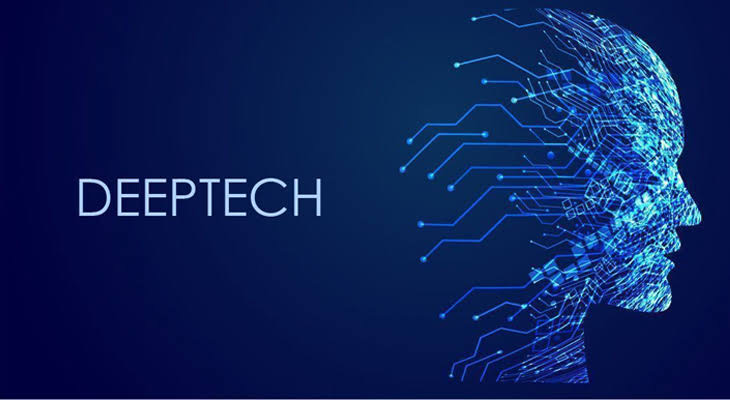
- 06 Jan 2024
Why is it in the News
The government will be sending a note, on a new ‘deep tech’ policy for India in the coming weeks to the Union Cabinet for approval, said Prof. Ajay Kumar Sood, Principal Scientific Advisor at a public event on January 5.
Key Details in the Draft NDTSP:
- The Draft National Deep Tech Startup Policy (NDTSP) stands out through its key highlights, enhancing the existing Startup India policies by fostering an environment conducive to the growth of deep tech startups.
- It addresses the unique challenges these startups face.
- The draft NDTSP introduces new policy instruments and recommends essential policy changes under several themes, including nurturing research, development, and innovation, strengthening the intellectual property regime, facilitating access to funding, enabling shared infrastructure and resource sharing, creating supportive regulations, standards, and certifications, attracting human resources, initiating capacity building, promoting procurement and adoption, ensuring policy and program interlinkages, and sustaining deep tech startups.
India's 'Deep Tech' Startup Ecosystem faces significant challenges as outlined in the draft 'deep tech' policy:
- As of May 2023, the DPIIT recognizes 10,298 startups, but only about 10% fall under the 'deep tech' category, indicating a need for more effort and support.
- A major hurdle is the inadequate funding for 'deep tech' startups. Unlike fintech or retail software startups that require comparatively smaller funds, 'deep tech' startups demand significantly larger financial investments.
- This financial gap poses a notable obstacle to their growth and development.
What is Deep Tech?
- Deep technology, often referred to as "deep tech," encompasses advanced technologies rooted in substantial scientific or engineering innovations.
- These innovations are considered "deep" due to their sophisticated and highly advanced nature, providing solutions to complex challenges or issues.
- Examples of breakthroughs in deep tech include genomics, robotics, nanotechnology, and clean energy initiatives emerging from research labs and academia.
- Deep-tech startups and companies are characterized by their pursuit of solutions to intricate problems through technologies and processes involving lengthy research and development cycles.
- Importantly, businesses and startups that rely on easily replicable ideas do not qualify as deep tech startups.
- Deep tech stands apart from high tech, which denotes a broader scope of technical innovations and advancements.
- Unlike high-tech companies, those in deep tech are primarily focused on profound scientific or engineering breakthroughs.
Isro’s futuristic fuel cell system could power space station (TOI)
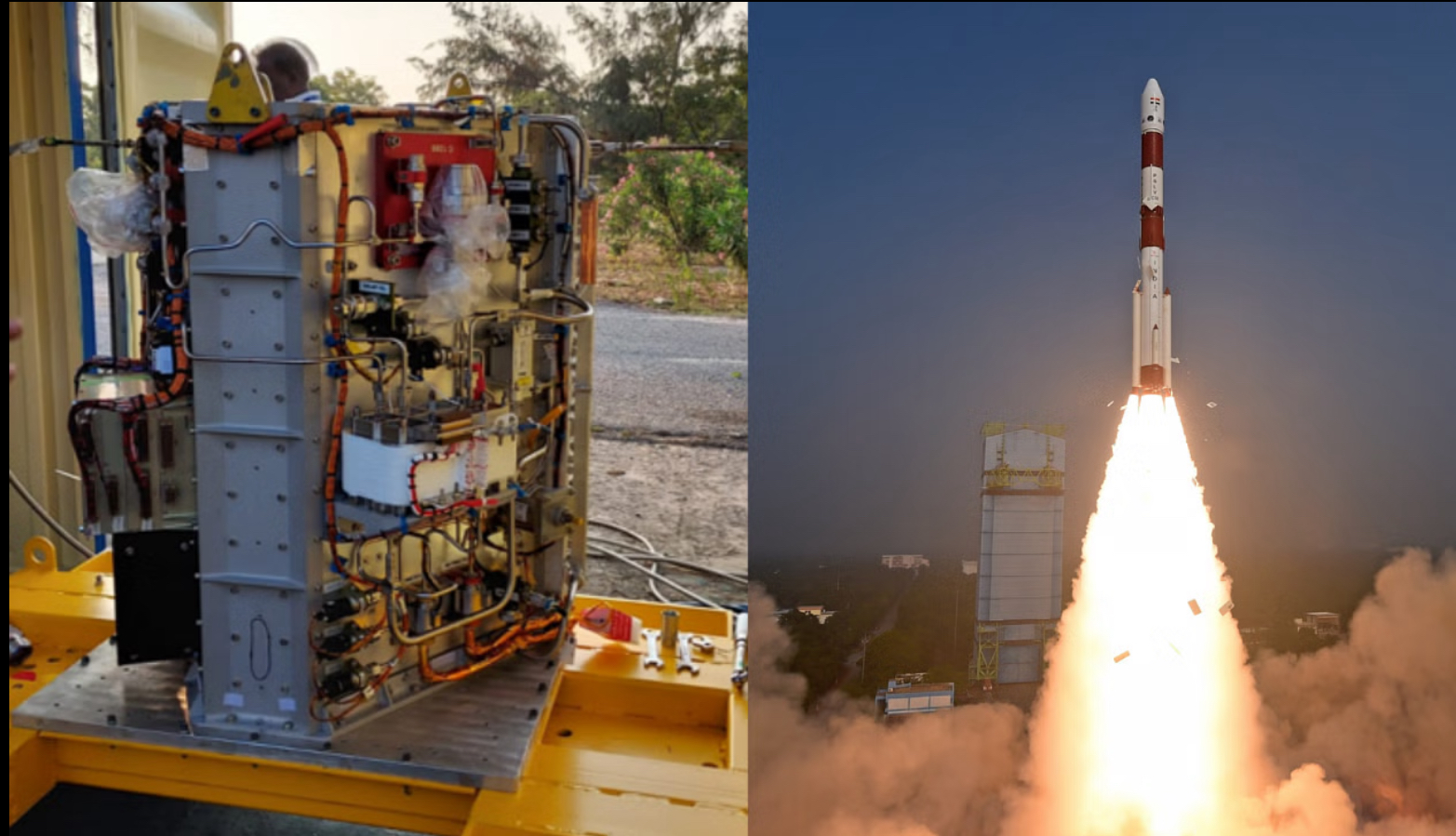
- 06 Jan 2024
Why is it in the News
Recently, a futuristic fuel cell-based power system was successfully tested by Indian Space Research Organisation (ISRO) to provide a sustainable and reliable power source for space stations.
What is a Fuel Cell?
- Fuel cells, intricate devices powered by chemical reactions, have diverse applications spanning transportation, industrial sectors, commercial and residential buildings, and reversible grid energy storage systems.
- Operationally, fuel cells consist of two electrodes—an anode and a cathode—immersed in an electrolyte.
- The anode, supplied with hydrogen fuel, undergoes oxidation to produce hydrogen ions and electrons.
- Simultaneously, the cathode, exposed to an oxidizer like oxygen, results in the production of water as hydrogen ions absorb electrons.
- The voltage per unit cell is determined by the energy level disparity at the electrodes. While a single fuel cell generates a modest amount of direct-current electricity, practical use often involves assembling stacks of these cells.
- Advantages: Advantages of fuel cells include lower or zero emissions, particularly with hydrogen fuel cells emitting only water, addressing climate concerns by avoiding carbon dioxide emissions.
- They operate quietly with few moving parts, achieve higher efficiencies compared to combustion engines, and resemble batteries but offer prolonged electrical energy due to continuous external fuel and air/oxygen sources.
- This longevity distinguishes them from batteries that rely on finite fuel material and oxidant, making fuel cells a sustainable and efficient choice for various applications.
About ISRO:
- The Indian Space Research Organization (ISRO) is the pioneer space exploration agency of the Government of India, headquartered at Bengaluru.
- ISRO was formed in 1969 with a vision to develop and harness space technology in national development, while pursuing planetary exploration and space science research.
- ISRO replaced its predecessor, INCOSPAR (Indian National Committee for Space Research), established in 1962 by India’s first Prime Minister Pt. Jawaharlal Nehru and scientist Vikram Sarabhai, considered amongst the founding fathers of the Indian space program.
BRO Implements Indigenous Technology for Road Construction Near China Border in Arunachal Pradesh (TOI)
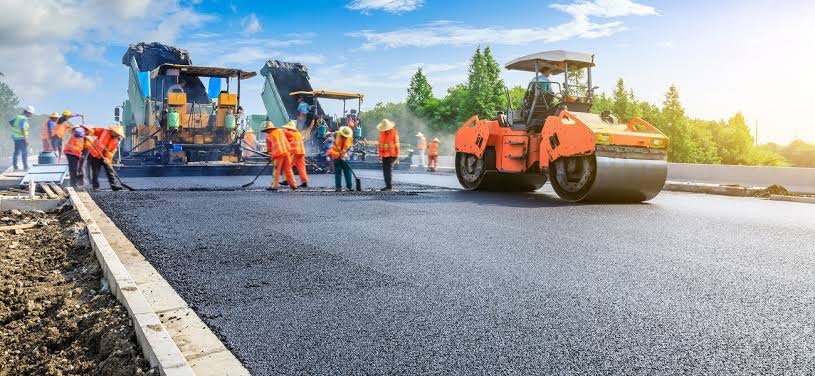
- 06 Jan 2024
Why is it in the News
In order to improve operational capacity of the defence forces in the high-altitude areas along the Indo-China border in Arunachal Pradesh, the BRO will build bituminous roads using an indigenous technology, “Rejupave” developed by India’s oldest and premier road research organisation, CSIR-Central Road Research Institute (CSIR-CRRI).
What is Rejupave Technology?
- CSIR-Central Road Research Institute (CSIR-CRRI), India's oldest road research organization, developed the Rejupave Technology.
- It is beneficial for constructing high-altitude bituminous roads in low and sub-zero temperatures.
- The technology actively reduces production and rolling temperatures of bituminous mixes by 30 to 400 degrees Celsius, ensuring minimal heat loss during transit in snowy conditions and long haulage times.
- The bio-oil-based asphalt modifier of this technology significantly lowers the heating requirements of bituminous mixes and preserves mix temperature during transit.
- In cold climatic regions, the 'Rejupave' asphalt modifier enhances long-term durability and resistance to thermal cracking under low-temperature conditions.
- Additionally, it plays a crucial role in reducing greenhouse gas emissions in the eco-sensitive mountainous environment of Arunachal Pradesh.
About CSIR-Central Road Research Institute (CRRI):
- Established in 1952, CSIR-Central Road Research Institute (CRRI) stands as a premier national laboratory under the Council of Scientific and Industrial Research (CSIR).
- CRRI's major research and development programs encompass a range of projects, including the design, construction, and maintenance of roads and runways, traffic and transportation planning for large and medium cities, management of roads in diverse terrains, improvement of marginal materials, utilization of industrial waste in road construction, and landslide control.
- The institute extends its expertise by providing technical and consultancy services to various organizations both within India and internationally.
- CRRI actively contributes to capacity building in highway engineering, empowering human resources to undertake and execute road and runway projects.
High-frequency waves detected in the Martian Upper Atmosphere could help understand plasma processes over Mars (PIB)

- 06 Jan 2024
Why is it in the News
Recently, scientists have detected the existence of high-frequency plasma waves in the Martian Upper Atmosphere with novel narrowband and broadband features that can help to understand plasma processes in the Martian plasma environment.
What are Plasma Waves?
- Plasma waves, commonly observed in Earth's magnetosphere, denote short-time scale fluctuations in electric and magnetic fields.
- These waves play a crucial role in energizing and transporting charged particles within Earth's magnetosphere.
- Specific plasma waves, like electromagnetic ion cyclotron waves, serve as a safeguard, cleansing Earth's radiation belt, known to pose threats to satellites.
- Researchers, intrigued by this phenomenon, seek to understand the presence of diverse plasma waves around planets without intrinsic magnetic fields, such as Mars.
Key Observations:
- Scientists utilized high-resolution electric field data from NASA's Mars Atmosphere and Volatile Evolution Mission (MAVEN) spacecraft to examine high-frequency plasma waves in the Martian environment.
- These waves manifest as either parallel-propagating electron oscillations (Langmuir waves) or perpendicular-propagating electron oscillations (upper-hybrid type waves) in Mars' magneto sheath region.
- Two distinct wave modes, below and above the electron plasma frequency, were observed in the Martian magnetosphere.
- Broadband and narrowband waves exhibited identifiable features in the frequency domain, with broadband waves displaying periodic patchy structures at intervals of 8–14 milliseconds.
Significance:
- The presence of these waves offers a valuable tool to investigate how electrons gain or dissipate energy within the Martian plasma environment.
Cabinet clears PRITHVI initiative for ease of research in earth sciences (Indian Express)

- 06 Jan 2024
Why is it in the News
The government Friday approved an initiative that will give it the flexibility to pursue research and use funds allocated to five different sub-schemes related to earth sciences over a five-year period.
About the PRITHVI Scheme:
- The PRITHVI Scheme is an initiative by the Ministry of Earth Sciences (MoES) designed to deepen our understanding of the Earth and its essential indicators.
- With a substantial allocation of Rs 4,797 crore spanning 2021-26, this comprehensive initiative aims to significantly advance research, modeling, and service delivery in critical domains like weather, climate, oceans, and polar regions.
- The scheme amalgamates five existing sub-schemes:
- Atmosphere and Climate Research-Modelling Observing Systems and Services (ACROSS)
- Ocean Services, Modelling Application, Resources and Technology (O-SMART)
- Polar Science and Cryosphere Research (PACER)
- Seismology and Geosciences (SAGE)
- Research, Education, Training, and Outreach (REACHOUT).
- Collectively, these programs strive to deepen our comprehension of Earth's vital signs and translate scientific knowledge into practical services for the benefit of society, the environment, and the economy.
Objectives:
- A primary aim of PRITHVI is to enhance and sustain long-term observations across the atmosphere, ocean, geosphere, cryosphere, and solid earth.
- This facilitates the recording and monitoring of vital signs and changes within the Earth System.
- The scheme places emphasis on developing predictive models for weather, ocean, and climate hazards while advancing our understanding of climate change science.
- Exploring polar regions and high seas is a significant aspect, targeting the discovery of new phenomena and resources.
- The scheme underscores the development of technology for exploring and sustainably harnessing oceanic resources for societal applications.
Implementation:
- Various components of the PRITHVI scheme are interdependent, executed in an integrated manner through the collective efforts of the institutes under the MoES.
10th century Kadamba inscription written in Kannada, Sanskrit found in Goa (The Hindu)
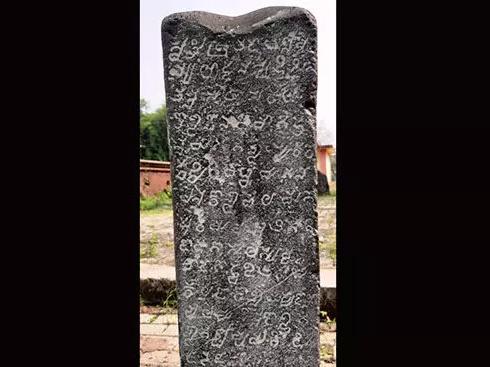
- 05 Jan 2024
Why is it in the News?
An inscription written in Kannada and Sanskrit and said to be of 10th century A.D. Kadamba period has been discovered in the Mahadeva temple at Cacoda in southern Goa.
About the Kadamba Inscription:
- Discovery and Study of the Inscription: The inscription illuminates the Kadamba period in Goa, commencing with the auspicious phrase 'Be it well' (Swasthi Shri).
- It was discovered between the temples of Mahadev and Sateri-Betal at Cacoda in Goa.
- Epigraphic Details: It chronicles the story of Gundayya, Talara Nevayya's son, who vowed to fulfill his father's desire by capturing a Gopura in the port of Goa.
- The inscription is engraved in Kannada and Nagari characters.
- Its literary style mirrors the Talangre inscription of Jayasimha I from the same period.
- The deciphering of the Kadamba stone inscription has brought to light its historical and socio-cultural importance.
- Historical Narrative: The Kadambas of Goa served as subordinates to the Chalukyas.
- Kadamba Shasthadeva, appointed as Mahamandaleshwara of Goa by Chalukyan emperor Tailapa II, played a key role in overthrowing the Rashtrakutas.
- In 960 A.D., Kadamba Shasthadeva conquered Chandavara and the port of Gopakapattana (present Goa).
- Gundayya, Talara Nevayya's son, actively participated in the battle, successfully securing the port but sacrificing his own life.
- To commemorate his son's heroic fight, Talara Nevayya erected a memorial stone with the inscription in the Mahadev temple at Cacoda.
- Socio-cultural Importance: Cacora village, situated near navigable waterways, establishes connections to the Upper Ghat region through the ancient route of Diggi ghat leading to Karnataka.
- Currently a census town under the Municipality of Curchorem Cacora in Goa, Cacoda hosts the Mahadev temple with its affiliated deities, showcasing the cultural richness and historical significance of the area.
Justice Gavai nominated as SC Legal Services Committee Chairman: What law says on free legal aid in India (Indian Express)
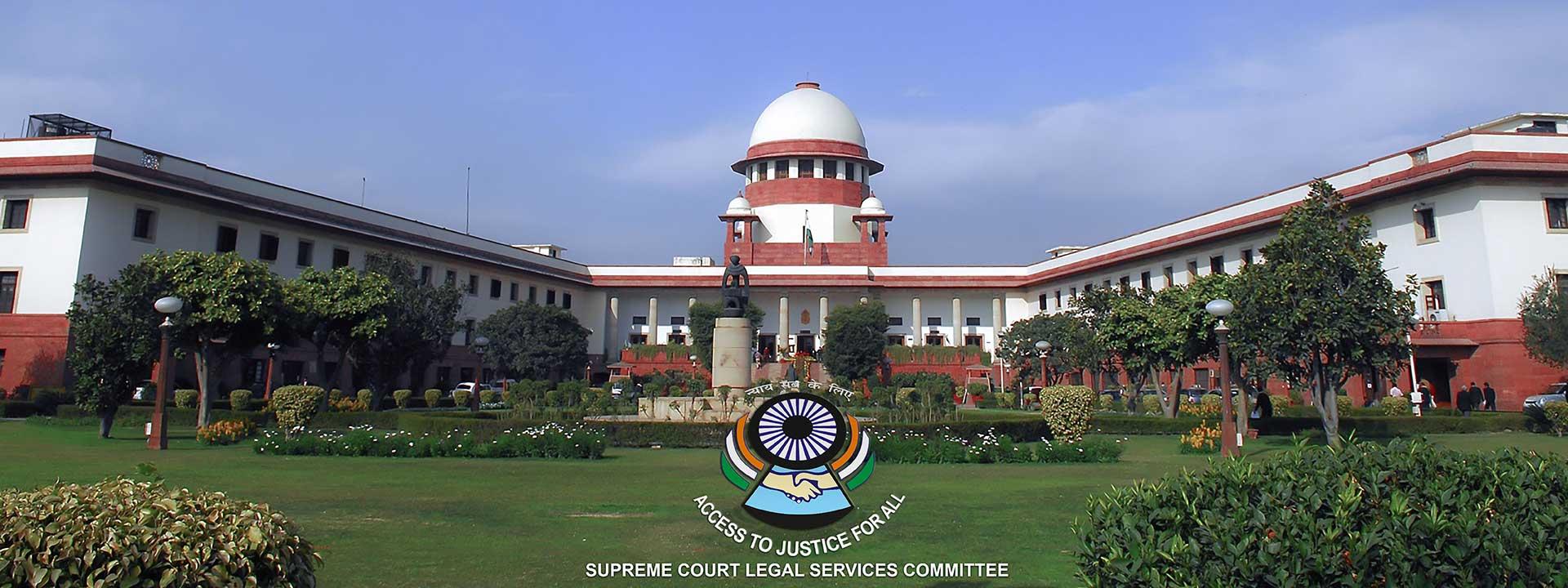
- 05 Jan 2024
Why is it in the News
Supreme Court judge Justice BR Gavai has been nominated as the Chairman of the Supreme Court Legal Services Committee (SCLSC), replacing Justice Sanjiv Khanna – the seniormost judge of the top court after the Chief Justice of India (CJI).
What is the Supreme Court Legal Services Committee?
- The Supreme Court Legal Services Committee was constituted under Section 3A of the Legal Services Authorities Act, 1987, to provide “free and competent legal services to the weaker sections of society”, in cases falling under the top court’s jurisdiction.
- Section 3A of the Act states that the Central Authority (the National Legal Services Authority or NALSA) shall constitute the committee.
- It consists of a sitting SC judge, who is the chairman, along with other members possessing the experience and qualifications prescribed by the Centre.
- Both the chairman and other members will be nominated by the CJI. Further, the CJI can appoint the Secretary to the Committee.
Who does the SCLSC comprise?
- As of date, the SCLSC consists of chairperson BR Gavai and nine members nominated by the CJI.
- The Committee, in turn, can appoint officers and other employees as prescribed by the Centre, in consultation with the CJI.
- Besides this, Rule 10 of the NALSA Rules, 1995, entails the numbers, experience, and qualifications of the SCLSC members.
- Under Section 27 of the 1987 Act, the Centre is empowered to make rules in consultation with the CJI, by notification, to carry out the provisions of the Act.
What is the need for legal services and how is it dispensed to the people?
- The need for providing legal services has been underlined in many provisions of the Indian Constitution.
- Article 39A states, “The State shall secure that the operation of the legal system promotes justice, on a basis of equal opportunity, and shall, in particular, provide free legal aid, by suitable legislation or schemes or in any other way, to ensure that opportunities for securing justice are not denied to any citizen by reason of economic or other disabilities.”
- Moreover, Articles 14 (right to equality) and 22(1) (rights to be informed of grounds for arrest) also make it obligatory for the State to ensure equality before the law and a legal system that promotes justice based on equal opportunity.
- Although the idea of a legal aid programme was earlier floated in the 1950s, it was in 1980 that a committee at the national level was established under the chairmanship of then SC judge Justice PN Bhagwati.
- The Committee for Implementing Legal Aid Schemes started monitoring legal aid activities throughout India.
What the Legal Services Authorities Act says?
- In 1987, the Legal Services Authorities Act was enacted to give a statutory base to legal aid programmes.
- It aims to provide free and competent legal services to eligible groups, including women, children, SC/ST and EWS categories, industrial workers, disabled persons, and others.
- Under the Act, NALSA was constituted in 1995 to monitor and evaluate the implementation of legal aid programmes and to lay down policies for making legal services available.
- A nationwide network has been envisaged under the Act for providing legal aid and assistance.
- It also disburses funds and grants to State Legal Services Authorities and NGOs for implementing legal aid schemes and programmes.
- Subsequently, in every state, State Legal Services Authorities (SLSA) were established to implement NALSA’s policies and directions, give free legal services to people, and conduct Lok Adalats.
- An SLSA is headed by the Chief Justice of the respective High Court and includes the senior HC judge as its Executive Chairman.
- While the HC Chief Justice is the patron-in-chief of the SLSA, the CJI is the patron-in-chief of NALSA.
- Similarly, District Legal Services Authorities (DLSAs) and Taluk Legal Services Committees were established in districts and most taluks.
- Situated in the District Courts Complex in every district, each DLSA is chaired by the District Judge of the respective district.
- The Taluka or Sub-Divisional Legal Services Committees are headed by a senior civil judge.
- Collectively, these bodies organise legal awareness camps, provide free legal services, and supply and obtain certified order copies and other legal documents, among other functions.
How graphene semiconductors can revolutionise electronics and computing (Front Line)

- 05 Jan 2024
Why is it in the News
Recently, Scientists have made a breakthrough in electronics, creating the world’s first functional semiconductor made from graphene—a material known for being tough, flexible, light and with a high resistance.
What is Graphene?
- Graphene is a single sheet of carbon atoms—a 2D material held together by the strongest chemical bonds known.
- These carbons are arranged in tessellated hexagons, much like honeycomb.
- It is an incredibly strong material. It’s so strong we can hold up a football with just one atomic layer of graphene.
- Graphene is also incredibly flexible, making it ideal for use in electrical devices and batteries, or even printed on glass, plastics or fabrics.
Keys Properties of Graphene:
- Strength: it is the strongest material ever measured, about 200 times stronger than steel.
- This is because the strong covalent bonds between carbon atoms in the hexagonal lattice make it very difficult to break apart.
- Conductivity: Graphene is also an excellent conductor of heat and electricity.
- In fact, it is the best conductor of heat at room temperature of any known material.
- This is because the electrons in graphene can move freely through the lattice without encountering any obstacles.
- Transparency: Graphene is almost completely transparent to light, absorbing only about 2.3% of visible light.
- This makes it a promising material for use in transparent electronics and solar cells.
- Flexibility: Graphene is also incredibly flexible, and can be bent and folded without breaking.
- This makes it a good candidate for use in flexible electronics, such as wearable devices.
- These properties make graphene a potential game-changer for a wide range of industries, including electronics, energy, transportation, and medicine.
Potential Applications of Graphene:
- Electronics: Graphene could be used to make transistors that are much faster and more efficient than the silicon transistors used in today's electronics.
- This could lead to the development of smaller, lighter, and more powerful devices.
- Energy: Graphene could be used to make solar cells that are more efficient at converting sunlight into electricity.
- It could also be used to make batteries that are lighter and have longer lifespans.
- Transportation: Graphene could be used to make lighter and stronger airplanes and cars.
- It could also be used to make more efficient batteries for electric vehicles.
- Medicine: Graphene could be used to make sensors that can detect diseases at an early stage.
- It could also be used to deliver drugs directly to diseased cells.
Drawback of Graphene:
- Graphene has major drawbacks, which has prevented its use in electronics.
- One major issue is known as the “band gap problem.”
- The band gap is a crucial electronic property that allows semiconductors to switch on and off.
- Graphene didn’t have a band gap—until now.
- Despite its promise, graphene is still a relatively new material and there are a number of challenges that need to be overcome before it can be widely used.
- One challenge is that it is difficult and expensive to produce large sheets of high-quality graphene.
- Another challenge is that graphene is very sensitive to its environment, and its properties can be easily affected by the presence of even small amounts of impurities.
- However, researchers are making rapid progress in overcoming these challenges, and it is likely that graphene will become a common material in the near future.
- With its unique properties, graphene has the potential to revolutionize many different industries and improve our lives in countless ways.
PM’s school becomes base for week-long residential programme for students (The Hindu)
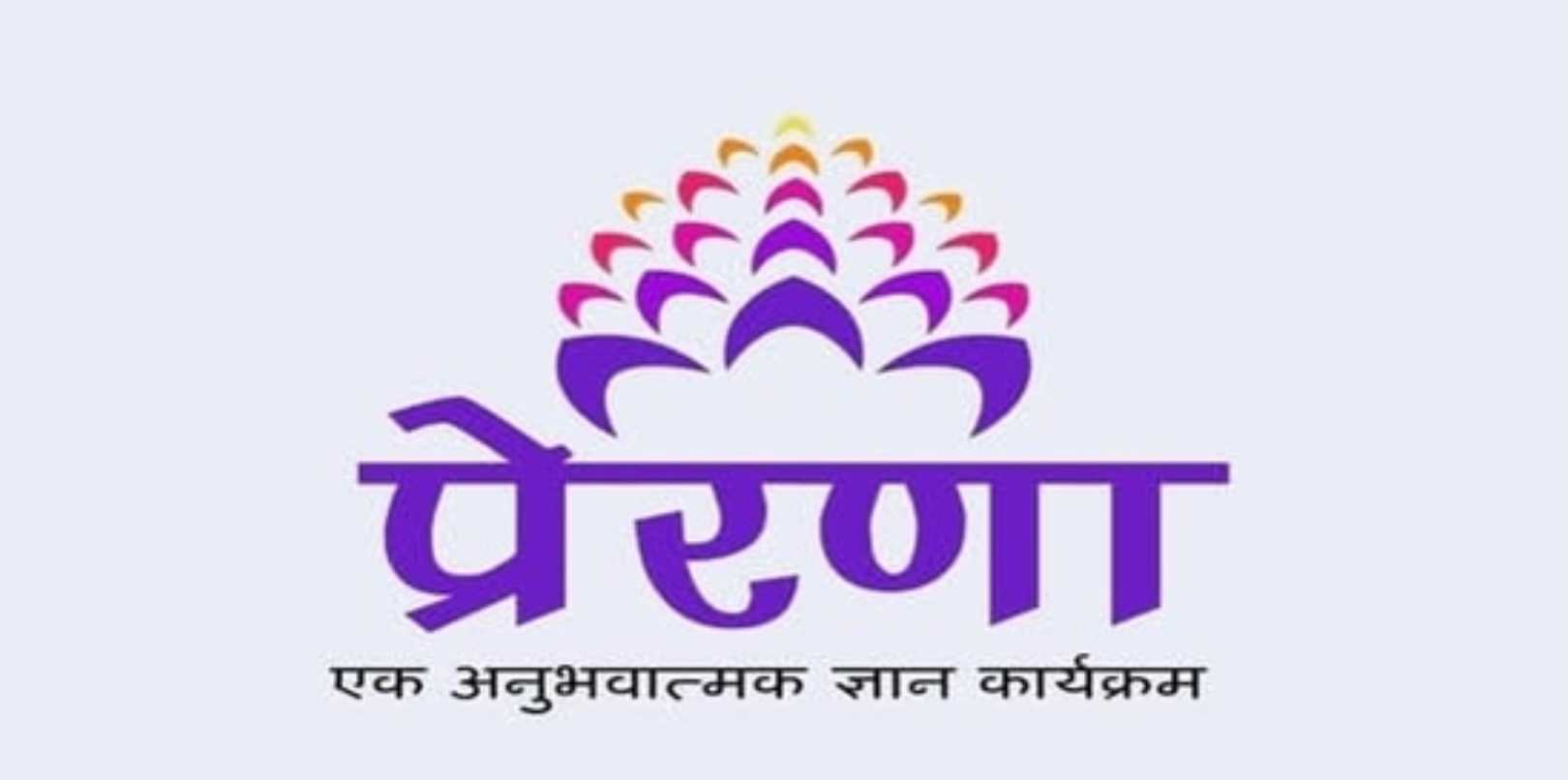
- 05 Jan 2024
Why is it in the News
The Ministry of Education on Thursday launched ‘Prerana’, an experiential learning programme, which will operate from the vernacular school in Prime Minister Narendra Modi’s birthplace Vadnagar, Gujarat where Mr. Modi studied when he was a student.
Context:
- The Department of School Education & Literacy, operating under the Ministry of Education, Government of India, has unveiled 'Prerana: An experiential learning program.'
- This innovative initiative is specifically crafted to deliver a profound, distinctive, and motivational learning experience to its participants.
- The overarching goal of this program is to cultivate and nurture leadership qualities among the individuals involved, thereby contributing to their holistic development and empowering them with the skills necessary for effective leadership in various contexts.
What is ‘Prerna’ Program?
- Prerana is driven by a strong commitment to integrate principles of Indian education system and the philosophy of value-based education which is a corner stone of the National Education Policy (NEP) 2020.
- It is a week-long residential program for selected students of class IX to XII.
- It is an experiential and inspirational learning program for students with the best-in-class technology where heritage meets innovation.
- A batch of 20 selected students (10 boys and 10 girls) will attend the program, every week from various parts of the country.
- Prerana program will run from a Vernacular School, established in 1888, in one of the oldest living cities of India, Vadnagar, district Mehsana, Gujarat.
- The curriculum of Prerana School prepared by IIT Gandhi Nagar is rooted in nine value based themes:
- Swabhiman and Vinay
- Shaurya and Sahas
- Parishram and Samarpan
- Karuna and Sewa
- Vividhta and Ekta
- Satyanishtha and Shuchita
- Navachar and Jigyasa
- Shraddha aur Vishwas, and
- Swatantrata and Kartavya.
- The program based on above themes will inspire the youth and foster respect for Bharat's unity in diversity, embodying the spirit of "Vasudhaiva Kutumbakam" and will contribute by making the youth of today, a flame holder for Viksit Bharat.
- Towards this endeavour, the participants will be guided by mentors from prestigious institutions.
- Selection Procedure: Students can register through the portal, wherein applicants can fill the requisite details to be a part of the ambitious and aspirational Prerana program.
- The registered applicants will go through a selection process, as prescribed on the portal.
- Applicants can also join the selection procedure conducted at the School/block level, on designated ‘Prerana Utsav’ day, through various activities based on the ethos of Prerana to evaluate for well rounded personalities keen to shape the future of our nation.
- Upon selection, the 20 participants (10 boys and 10 girls) will be attending the Prerana program and embark on a journey of inspiration, innovation, and self-discovery.
- After the program, the participants will carry the ethos of Prerana into their respective communities, become change makers and spark positive change to inspire others.
Ministry of Environment, Forest, and Climate Change submits proposals for Wetland City Accreditation under the Ramsar Convention on Wetlands for cities of Indore, Bhopal and Udaipur (The New Indian Express)
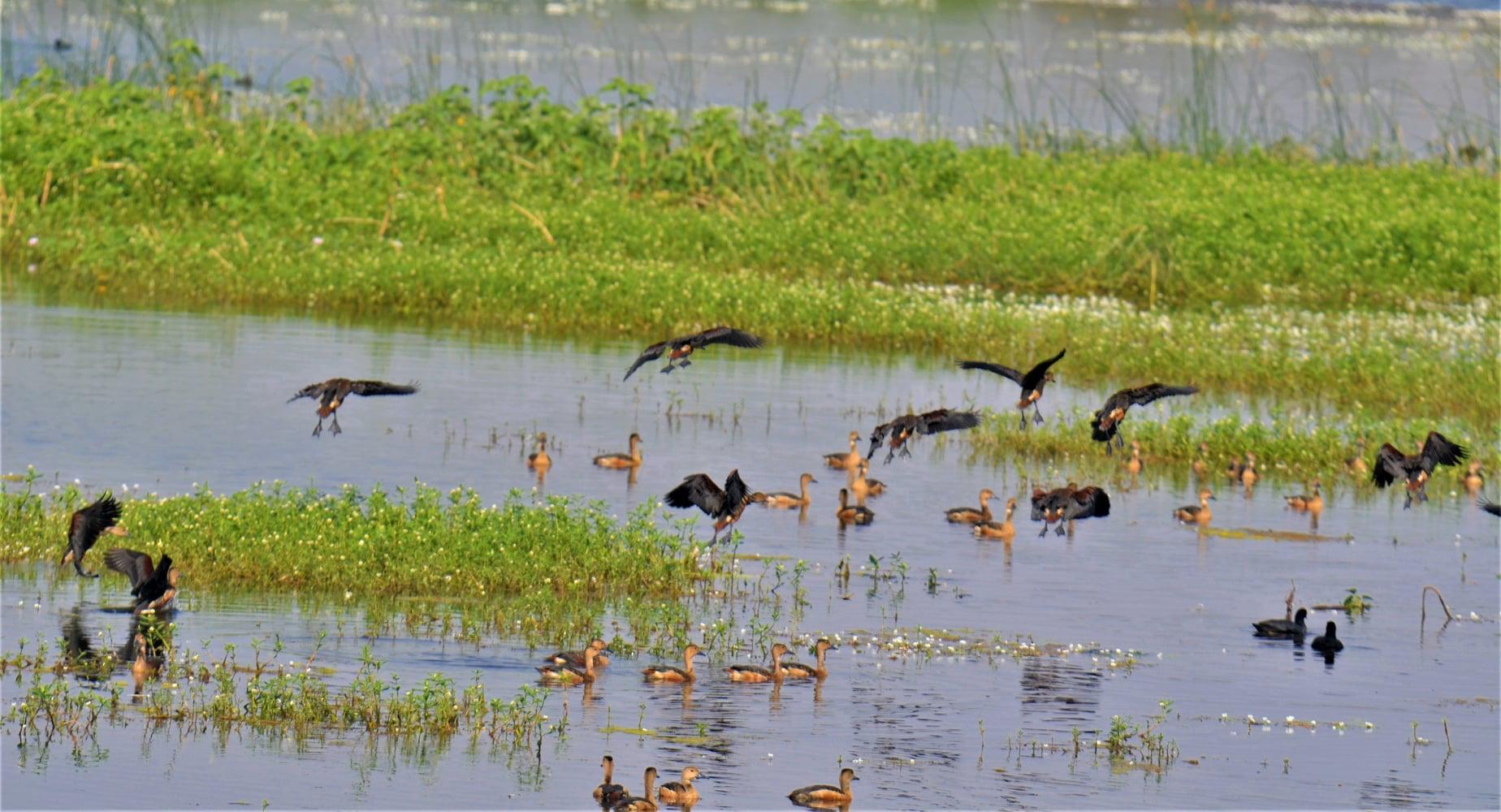
- 05 Jan 2024
Why is it in the News
MoEF&CC has submitted three nominations from India for Wetland City Accreditation (WCA) of Indore (Madhya Pradesh), Bhopal (Madhya Pradesh) & Udaipur (Rajasthan) under the Ramsar Convention on Wetlands.
What is Wetland City Accreditation (WCA)?
- Recognizing the importance of wetlands in urban and peri-urban environments and to take appropriate measures to conserve and protect these wetlands, the Ramsar Convention during COP12 held in the year 2015 approved a voluntary Wetland City Accreditation system under Resolution XII.10.
- It recognizes cities which have taken exceptional steps to safeguard their urban wetlands.
- The Wetland City Accreditation scheme aims to further promote the conservation and wise use of urban and peri-urban wetlands, as well as sustainable socio-economic benefits for local populations.
- Additionally, the Accreditation seeks to encourage cities that are close to and dependent on wetlands.
- Primarily Wetlands of International Importance, but also wetlands with other conservation category status, to develop and strengthen a positive relationship with these valuable ecosystems.
- To be formally accredited, a candidate for the Wetland City Accreditation should satisfy the standards used to implement each of the six international criteria mentioned Operational Guidance for WCA of the Ramsar Convention on Wetlands.
- This voluntary scheme provides an opportunity for cities that value their natural or human-made wetlands to gain international recognition and positive branding opportunities for their efforts in demonstrating strong positive relationships with wetlands.
- The ongoing Amrit Dharohar initiative of the MoEF&CC announced as part of this year’s budget also aims to achieve similar goals by promoting unique conservation values of Ramsar Sites.
- In this context, WCA will not only generate public awareness about conservation of urban and peri-urban wetlands but will also help in implementation of Amrit Dharohar across the country.
The Three Nominated Cities Include:
- Indore: Founded by Holkars, Indore is the cleanest city in India and the recipient of India’s Smart City Award 2023 for its best sanitation, water and urban environment.
- Sirpur Lake, a Ramsar Site in the city, has been recognised as an important site for water bird congregation and is being developed as a Bird Sanctuary.
- A strong network of more than 200 wetland mitras is engaged in bird conservation and sensitising local community to protect Sarus Crane.
- Bhopal: One of the cleanest cities in India that has proposed conservation zones around the wetlands in its draft City Development Plan 2031.
- Bhoj Wetland, Ramsar Site is the city’s lifeline, equipped with the world-class wetlands interpretation centre, Jal Tarang.
- Additionally, the Bhopal Municipal Corporation has a dedicated Lake Conservation Cell.
- A network of more than 300 wetland mitras is engaged in wetland management and conservation of Sarus Crane.
- Udaipur: Located in Rajasthan, the city is surrounded by five major wetlands, namely, Pichola, Fateh Sagar, Rang Sagar, Swaroop Sagar, and Doodh Talai.
These wetlands are an integral part of the city’s culture and identity, help maintain the city’s microclimate, and provide a buffer from extreme events.
India to use SpaceX rocket to launch communications satellite (Indian Express)
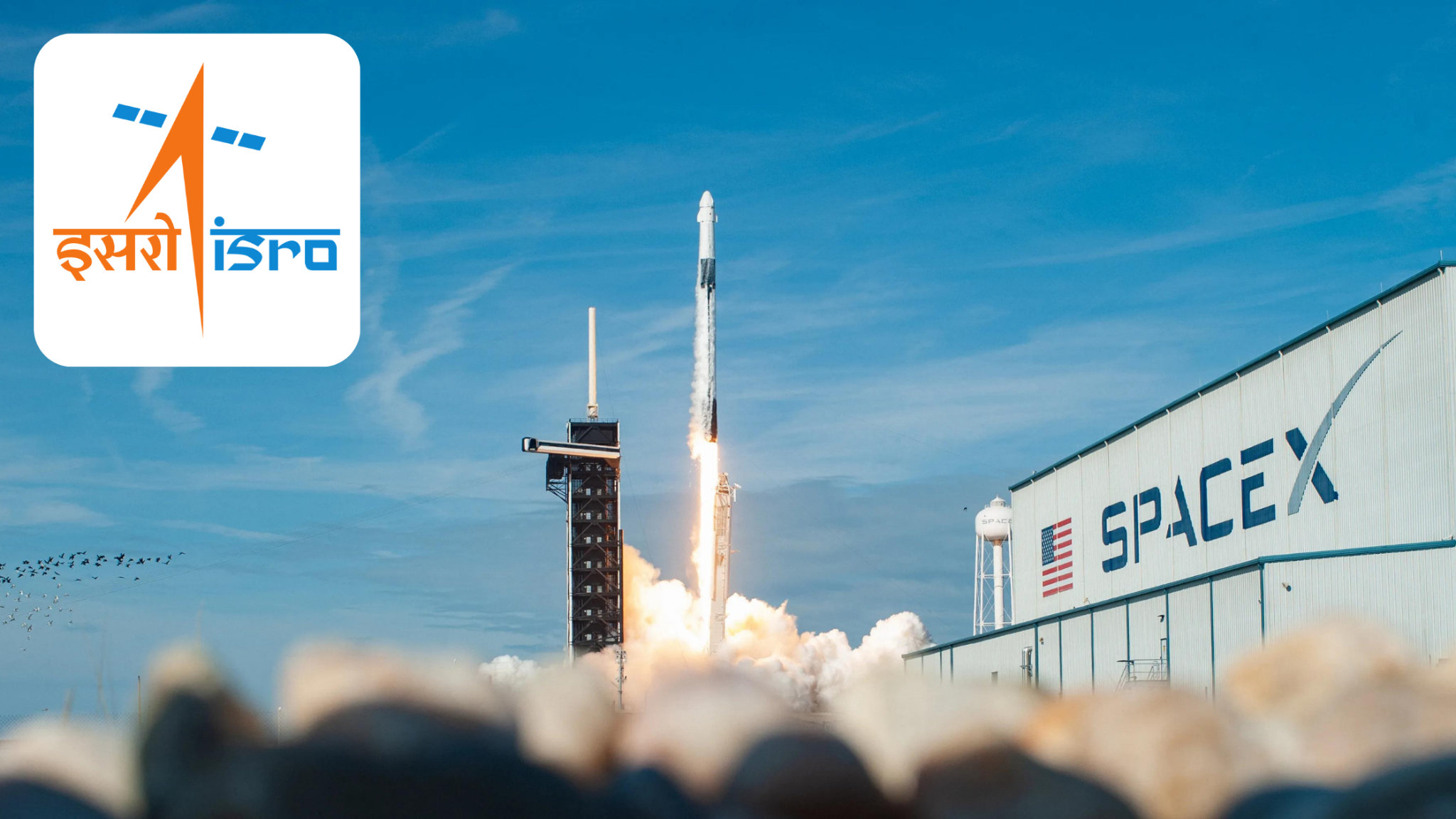
- 04 Jan 2024
Why is it in the News?
The Indian Space Research Organisation (ISRO) is gearing up for the launch of its communication satellite GSAT-20, weighing 4,700kg, an initiative marking India's entry into a new era of satellite technology.
Context:
- The commercial arm of ISRO, NewSpace India Limited (NSIL) will launch GSAT-20 (renamed as GSAT-N2), on-board SpaceX’s Falcon-9 during the second quarter of 2024.
- ISRO's current flagship rocket, the LVM3, holds a maximum carrying capacity of four tons.
- Falling short by 700kg for the GSAT-20.
- This satellite will cater to cellular backhaul service needs particularly to remote and unconnected regions.
What is GSAT 20 Satellite?
- GSAT-20 is an Indian geostationary Ka-band high-throughput communications satellite.
- GSAT 20 is built on the I-3K unified modular bus with electric-only propulsion.
- It will be India's first satellite to rely entirely on electric propulsion, which can be five to six times more efficient than chemical-based propulsion.
- It features a Ka × Ka high-throughput communications payload with 70 Gbps throughput utilizing 32 spot beams with each 2 polarisations providing broadband services across the Indian region.
- The satellite was initially set for a 2020 launch on a GSLV Mk.3 (2) rocket but got moved up to 2019 on an Ariane-5ECA+.
- In 2021, the plan returned to a GSLV Mk.3 (2) launch.
- In early 2024, a contract with SpaceX was signed for a Falcon-9 v1.2 (Block 5) launch.
What is SpaceX’s Falcon-9 Rocket?
- Falcon 9 is a reusable, two-stage rocket designed and manufactured by SpaceX “for the reliable and safe transport of people and payloads into Earth orbit and beyond".
- It is the world’s first orbital-class reusable rocket.
- Reusability allows SpaceX to re-fly the most expensive parts of the rocket, which in turn drives down the cost of space access," it added.
- Till now, it has undertaken 285 launches, 243 landings, and 217 re-flights.
Centre, SEBI will regulate short selling, Solicitor-General tells Supreme Court (The Hindu)

- 04 Jan 2024
Why is it in the News?
The Supreme Court judgement records a statement made by Solicitor General Tushar Mehta that the Union government and the Securities and Exchange Board of India (SEBI) will take measures to regulate short selling.
What is Short Selling?
- Short selling is a financial strategy where an investor or trader borrows securities, such as stocks, from a broker and sells them in the market with the expectation of buying them back at a lower price in the future.
- Short selling is regulated by a circular notified by SEBI in December 2007.
- This technique is employed by individuals who anticipate a decline in share prices, aiming to profit from their predictions.
- The process involves selling shares that the trader does not own.
- To initiate a short position, the trader borrows shares from a broker, who lends them with an agreement for return at the settlement time.
- The borrowed stocks are then sold at the prevailing market rate, creating a short position.
- Subsequently, the trader waits for the prices to decrease before buying back the shares to close the position.
- The ultimate goal of short selling is to 'sell high and buy low.'
- Profits are made when share prices fall, and the trader benefits from the difference between the selling and repurchasing prices.
- Conversely, if the trader's analysis is incorrect and share prices rise, they incur a loss.
How Does Short Selling Work?
Short selling is an activity that allows market participants to profit from the fall in the price of a financial instrument. It involves borrowing an asset from a broker, selling it in the market, and then repurchasing it later at a hopefully lower price to return it to the lender.
- Borrowing the Asset: The trader borrows the asset (usually stocks) from a broker or another trader.
- This borrowed asset is typically done through a margin account, where the investor agrees to certain terms and pays a fee or interest for the borrowed amount.
- Selling the Asset: After obtaining the borrowed asset, the trader immediately sells it on the market.
- This is where they take advantage of their belief that the asset's price will decrease.
- Waiting for Price Drop: The trader waits for the price of the asset to fall. If the price drops as anticipated, the investor can buy back the asset at a lower price.
- Repurchasing the Asset: Once the price has dropped, the trader uses the proceeds from the initial sale to repurchase the same asset at a lower price.
- Returning the Borrowed Asset: Finally, the trader returns the borrowed asset to the lender, typically the broker, from whom they originally borrowed it.
- Profit or Loss: The profit or loss in short selling is the difference between the price at which the asset was sold and the price at which it was repurchased, minus any borrowing fees, interest, or transaction costs.
Short selling is considered a more advanced and riskier trading strategy, and it requires careful monitoring of market conditions. It is often used by experienced investors or hedge funds seeking to profit from anticipated price declines in specific securities or markets.
A first in 100 years, the Indian Science Congress was postponed amid a tussle between organisers, Govt (Indian Express)
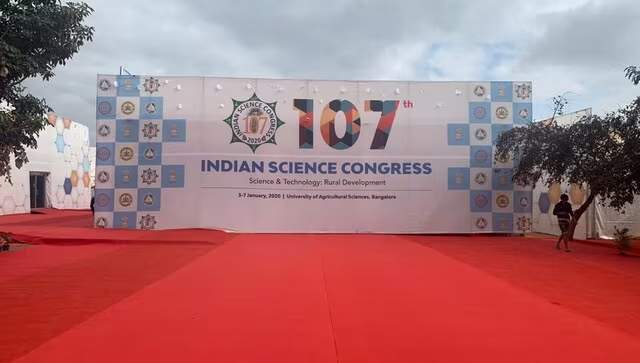
- 04 Jan 2024
Why is it in the News?
The Indian Science Congress, the largest gathering of scientists and students of science in the country and a permanent annual fixture in the calendar of the participant group for more than a century has been postponed.
Postponement of the Indian Science Congress:
- Unprecedented Interruption: The postponement of the Indian Science Congress holds unprecedented significance.
- Since its inception in 1914, the Congress has been an annual event, except for the years immediately following the onset of the Covid-19 pandemic (2021 and 2022).
- Tradition and Prime Ministerial Engagement: A cornerstone of scientific tradition, the Indian Science Congress is inaugurated by the Prime Minister, making it a fixture on the PM's calendar.
- Typically, it stands as the Prime Minister's first public engagement of the new year.
Why has the Science Congress Been Postponed This Year?
- This year's postponement stems from a protracted dispute between the Indian Science Congress Association (ISCA), the organizing body, and the Department of Science and Technology (DST) within the Union Ministry of Science and Technology.
- The DST, a key funding entity, withdrew support in September 2023, citing financial irregularities.
- The ISCA refuted the allegations and contested the DST's directive prohibiting government funds for Science Congress-related expenses, leading to an impasse that has resulted in the postponement.
- A legal challenge to the DST's decision is currently pending.
What is the Indian Science Congress (ISC)?
- The Indian Science Congress (ISC) is a unique event in the country that serves as a platform for scientific communities to interact with students and the general public on science-related matters.
- Organized by the Indian Science Congress Association (ISCA), an independent body supported by the Department of Science and Technology (DST) in the central government, the Science Congress is an annual five-day event from January 3 to 7, considered a permanent fixture on the Prime Minister’s calendar.
- The inaugural session of the Indian Science Congress took place in 1914 at the premises of the Asiatic Society, Calcutta.
- In recent years, the Indian Science Congress (ISC) has faced criticism due to issues such as a lack of substantial discussions, the promotion of pseudoscience, and outlandish claims by certain speakers.
- This has led to concerns among prominent scientists, with some advocating for the discontinuation of the event or, at the very least, the withdrawal of government support.
- While the government provides an annual grant for organizing the Science Congress, it does not play a direct role in its organization.
Namibian cheetah Aasha gives birth to 3 cubs in Kuno; ‘indicator that animals are acclimatising’ (Indian Express)
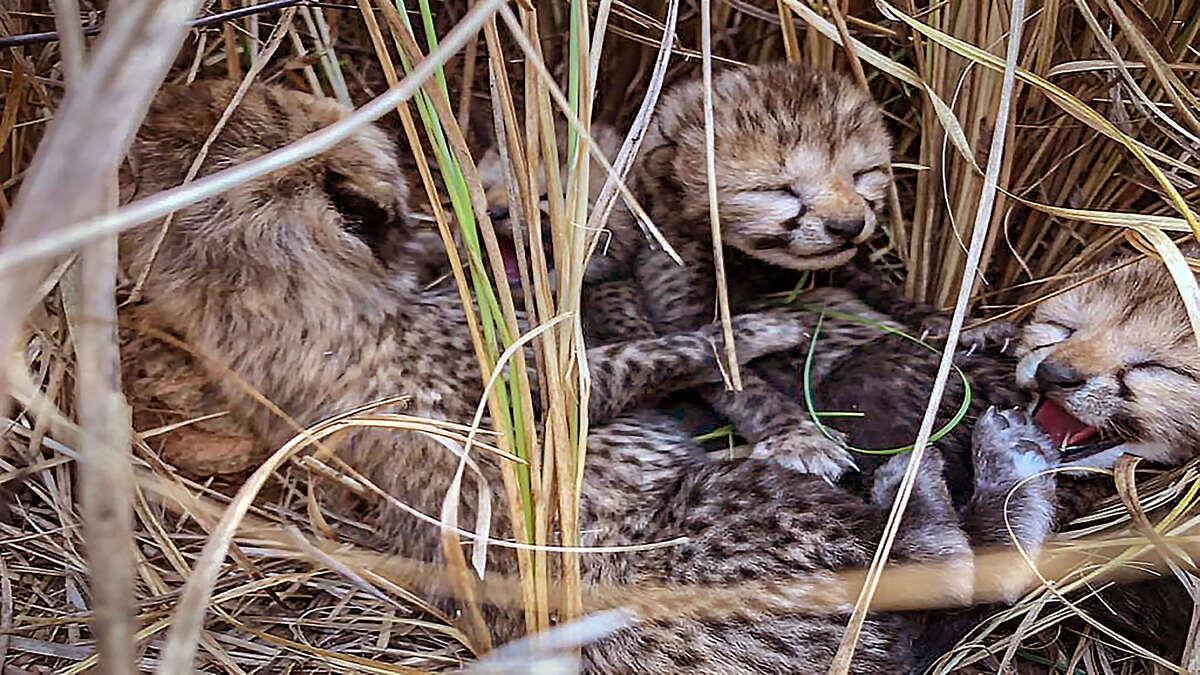
- 04 Jan 2024
Why is it in the News?
Recently, a Namibian cheetah named Aasha has given birth to three cubs at Kuno National Park in Madhya Pradesh.
About Kuno National Park (KNP):
- Location: Situated in the Sheopur district of Madhya Pradesh, Kuno National Park is nestled near the Vindhyan Hills.
- The park is aptly named after the Kuno River, a significant tributary of the Chambal River that traverses its expanse.
- Originally designated as a wildlife sanctuary, Kuno National Park attained the status of a national park in 2018.
- This transformation aligns with its pivotal role in the 'Action Plan for Introduction of Cheetah in India.'
- Vegetation and Flora: Kuno predominantly features a grassland landscape, punctuated by occasional rocky outcrops.
- The flora encompasses a diverse mix, including dominant species such as Kardhai, Salai, and Khair trees.
- The park boasts a rich composition with 123 tree species, 71 shrub species, 32 exotic and climbing species, and 34 bamboo and grass species.
- Fauna: The protected region of Kuno National Park shelters an array of wildlife, including the jungle cat, Indian leopard, sloth bear, Indian wolf, striped hyena, golden jackal, Bengal fox, and dhole.
- The park also delights bird enthusiasts with a habitat supporting over 120 bird species.
What is Project Cheetah?
- The Wildlife Trust of India started talks in 2009 to bring the cheetah back to India.
- Over five years, 50 cheetahs will be imported from African nations and placed in various national parks as part of the "Action Plan for Reintroduction of Cheetahs in India."
- Prime Site Selection - Kuno Palpur National Park (KNP): Among the surveyed sites in central Indian states, Kuno Palpur National Park (KNP) in Madhya Pradesh emerged as the most suitable location.
- This acclaim is attributed to its conducive habitat and ample prey base.
- KNP is deemed capable of supporting 21 Cheetahs, uniquely standing as a wildlife site where villages have been entirely relocated from within the park.
- Moreover, Kuno offers the prospect of harmoniously accommodating four of India's prominent big cats - tiger, lion, leopard, and Cheetah.
- Additional Recommended Sites: The project identifies other potential sites, including Nauradehi Wildlife Sanctuary (Madhya Pradesh), Gandhi Sagar Wildlife Sanctuary - Bhainsrorgarh Wildlife Sanctuary complex (Madhya Pradesh), Shahgarh bulge in Jaisalmer (Rajasthan), and Mukundara Tiger Reserve (Rajasthan).
- Implementation Progress: As a significant stride in the project's realization, 20 Cheetahs, comprising 8 from Namibia and 12 from South Africa, were introduced to Kuno Palpur National Park last year.
- This marks a historic initiative to establish a free-ranging Cheetah population in India, reviving their presence after a 70-year absence.
PM inaugurates Kochi-Lakshadweep Islands Submarine Optical Fibre Connection (PIB)

- 04 Jan 2024
Why is it in the News?
PM Modi recently, in Kavaratti, Lakshadweep, inaugurated the Kochi-Lakshadweep Islands submarine optical fibre connection (KLI-SOFC) project including various developmental projects worth more than Rs 1,150 crore.
Background-Kochi-Lakshadweep Submarine OFC (KLI) Project:
- The need for digitally connecting the Lakshadweep Islands through a high-capacity submarine cable link with the mainland has been felt for some time.
- Earlier, the only means of communication with the Islands was through Satellite medium, which had limited bandwidth capacity and was not able to meet the growing bandwidth demand.
- In the Kochi-Lakshadweep Islands Submarine Cable (KLI) project submarine cable connectivity from Mainland (Kochi) to eleven Lakshadweep Islands namely, Kavaratti, Agatti, Amini, Kadmat, Chetlet, Kalpeni, Minicoy, Androth, Kiltan, Bangaram and Bitra has been extended.
- The project is funded by the Universal Services Obligation Fund (USOF), Department of Telecommunication.
- Bharat Sanchar Nigam Limited (BSNL) was the Project Executing Agency and the work was awarded to NEC Corporation India Pvt Ltd.
- Major activities related to the project include Marine Route Survey, Submarine Cable laying, Civil Construction of CLS stations, Installation, Testing and Commissioning of End Terminals (SLTE).
- Highlights of the KLI Project:
- Total link distance: 1,868 kilometres.
- Total cost of project: Rs 1072 crore
???????Benefits of the KLI Project:
- The project will play a significant role in achieving the objective of ‘Digital India’ and ‘National Broadband Mission’ and in rolling out various e-governance projects of the Government of India in Lakshadweep Islands.
- E-Governance, Tourism, Education, Health, Commerce and Industries will get a boost
- It will also help in further improvement in the standards of living of the people on the Island and will accelerate overall social and economic development in these areas.
- The population of Lakshadweep Islands will be provided high-speed wireline broadband connectivity.
- High-speed broadband will be provided through FTTH and 5G/4G Mobile networks.
- The bandwidth created under this project will be available to all Telecom Service Providers (TSPs) to strengthen their telecom services in the Lakshadweep Islands.
Govt ready with rules for CAA, set to be notified before Lok Sabha polls announcement (Indian Express)
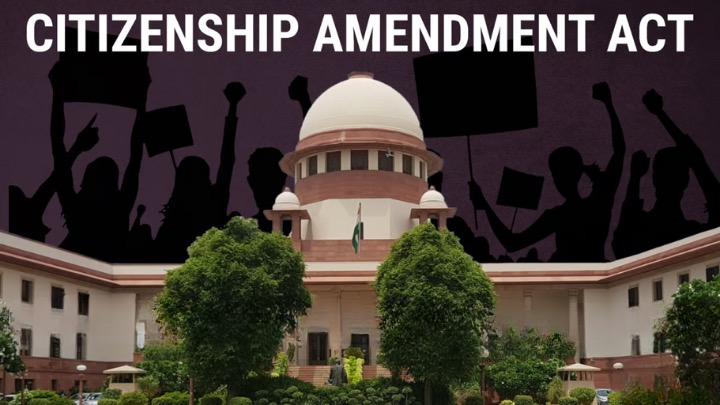
- 03 Jan 2024
Why is it in the News?
The rules for the Citizenship (Amendment) Act of 2019 are ready with the central government and will be notified "much before" the announcement of the Lok Sabha elections.
What is the Citizenship (Amendment) Act (CAA) 2019?
- The Citizenship (Amendment) Act of 2019 proposes amendments to the definition of illegal immigrants, specifically benefiting Hindu, Sikh, Parsi, Buddhist, Jain, and Christian immigrants (excluding Muslims) from Pakistan, Afghanistan, and Bangladesh.
- These individuals, residing in India without documentation, are eligible for expedited Indian citizenship within 5 years (reduced from 11 years).
Key Provisions:
- Cancellation of OCI Registration: The Act empowers the cancellation of Overseas Citizen of India (OCI) registration if the holder violates Citizenship Act provisions or other applicable laws.
Eligibility Criteria:
- Forced Migration: The CAA 2019 applies to those compelled to seek refuge in India due to religious persecution.
- Cut-off Date: Applicants must have entered India on or before December 31, 2014.
- Exceptions: The Act excludes areas under the Constitution's sixth schedule (autonomous tribal regions in Assam, Meghalaya, Tripura, and Mizoram) and states with an inner-line permit regime (Arunachal Pradesh, Nagaland, and Mizoram).
- Implementation Status: Despite lacking notified rules, leading to non-implementation, the government has repeatedly sought extensions for rule formulation.
Rules for the the CAA:
- The authorities have finalized the rules, and the online portal is operational.
- Upon issuing the rules, the authorities can implement the law, granting Indian citizenship to eligible individuals.
- The entire application process will be conducted online, allowing applicants to apply, even using their mobile phones.
- Applicants must declare the year of their entry into India without travel documents, with no requirement for additional documents.
- Requests from applicants who applied after 2014 will be processed according to the new rules.
Factors Contributing to the Delay in CAA Implementation:
- The CAA has encountered robust opposition, particularly in states like Assam and Tripura, leading to significant delays in its implementation.
- Demographic Concerns in Assam: In Assam, concerns have arisen over the perceived demographic impact of the CAA, with fears that it might contradict the 1985 Assam Accord's provisions.
- Assam Accord Violation Perception: The CAA is viewed in Assam as a potential breach of the 1985 Assam Accord, which permits citizenship for migrants arriving between January 1, 1966, and March 25, 1971.
- Nationwide Protest: Protests initially concentrated in the northeast expanded nationwide, contributing to a complex socio-political environment surrounding the CAA.
- Legal Challenges: The Supreme Court is handling petitions, including one from the Indian Union Muslim League, challenging the constitutional validity of the CAA.
- Allegations of Selectivity: Critics argue that the law is discriminatory, excluding persecuted communities like Rohingya, Tibetan Buddhists, and Sri Lankan Tamils, raising concerns about its arbitrary nature.
Counterarguments Responding to CAA Petitions:
- Basis of Classification: The government asserts that the CAA's classification is not based on religion but on addressing "religious discrimination" faced by minorities in neighbouring countries with a state religion.
- Parliamentary Deliberation: Emphasizing over seven decades of deliberation, the government highlights that the Parliament has considered issues related to minorities and enacted the CAA as a targeted amendment.
- Specific Problem Resolution: The CAA is portrayed as a focused amendment designed to address a specific issue prevalent in identified countries, rather than serving as a comprehensive solution for global challenges.
- Limited Legislative Scope: It is clarified that the legislation has a delimited scope, addressing the specific concerns of minorities in certain nations.
- The Indian Parliament is not obligated to address potential persecutions worldwide.
Another eye in the sky, on the ground: India is now part of the world’s largest radio telescope project (Indian Express)

- 03 Jan 2024
Why is it in the News?
The Indian government’s recent approval to join the SKA project, accompanied by a financial commitment of Rs 1,250 crore, marks the initial step towards this ratification.
What is the Square Kilometre Array Observatory (SKAO)?
- SKAO is an intergovernmental organisation dedicated to radio astronomy and is headquartered in the UK.
- At the moment, organisations from ten countries are a part of the SKAO.
- These include Australia, Canada, China, India, Italy, New Zealand, South Africa, Sweden, the Netherlands and the UK.
What is significant about the SKA telescope?
- The telescope, proposed to be the largest radio telescope in the world, will be located in Africa and Australia whose operation, maintenance and construction will be overseen by SKAO.
- The completion is expected to take nearly a decade at a cost of over £1.8 billion.
- Some of the questions that scientists hope to address using this telescope include:
- Beginning of the universe
- How and when the first stars were born
- The life cycle of a galaxy
- Exploring the possibility of detecting technologically-active civilisations elsewhere in our galaxy and
- Understanding where gravitational waves come from.
- As per NASA, the telescope will accomplish its scientific goals by measuring neutral hydrogen over cosmic time, accurately timing the signals from pulsars in the Milky Way, and detecting millions of galaxies out to high redshifts.
- Significantly, the development of SKA will use the results of various surveys undertaken using another powerful telescope called the Australian Square Kilometre Array Pathfinder (ASKAP), which is developed and operated by the country’s science agency CSIRO.
- This telescope, which has been fully operational since February 2019 mapped over three million galaxies in a record 300 hours during its first all-sky survey.
- ASKAP surveys are designed to map the structure and evolution of the Universe, which it does by observing galaxies and the hydrogen gas that they contain.
What are radio telescopes?
- Unlike optical telescopes, radio telescopes can detect invisible gas and, therefore, they can reveal areas of space that may be obscured by cosmic dust.
- Significantly, since the first radio signals were detected by physicist Karl Jansky in the 1930s, astronomers have used radio telescopes to detect radio waves emitted by different objects in the universe and explore them.
- According to NASA, the field of radio astronomy evolved after World War II and became one of the most important tools for making astronomical observations.
- The Arecibo telescope in Puerto Rico, which was the second-largest single-dish radio telescope in the world, collapsed in December 2020.
- The telescope was built in 1963 and because of its powerful radar, scientists employed it to observe planets, asteroids and the ionosphere, making several discoveries over the decades, including finding prebiotic molecules in distant galaxies, the first exoplanets, and the first millisecond pulsar.
Prime Minister pays tributes to Savitribai Phule and Rani Velu Nachiyar on their Jayanti (PIB)
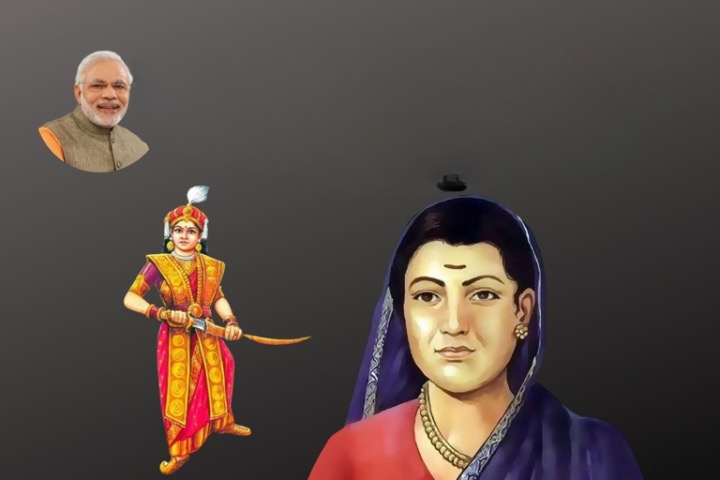
- 03 Jan 2024
Why is it in the News?
The Prime Minister, Shri Narendra Modi paid tributes to Savitribai Phule and Rani Velu Nachiyar on their Jayanti.
Who is Savitribai Phule?
- Recognized as India's first woman teacher, Savitribai Phule was a pioneer who defied prevailing societal conventions to advance women's education, equality, and justice.
- She was a Dalit lady from the Mali community and was born on January 3, 1831, in Satara District's Naigaon (Maharashtra).
- Despite prevailing norms that limited education to affluent men, the Phules established India's first girls' school in Bhidewada, Pune, in 1848.
- Savitribai's commitment to social reform led to the establishment of Mahila Seva Mandal in 1852, advocating for women's rights.
- In 1860, she initiated a strike against shaving the hair of widowed women.
- Savitribai actively promoted inter-caste marriages, and widow remarriage, and fought against social issues like child marriage, sati, and dowry.
- In collaboration with Jyotirao, she founded the Balhatya Pratibandhak Griha, offering support to pregnant widows.
- The couple further established the Satyashodhak Samaj in 1873, aimed at dismantling caste, religion, and class hierarchies.
- Her literary contributions include "Kavya Phule" (1854), her first collection of poems, and "Bavan Kashi Subodh Ratnakar" (1892).
- Savitribai Phule's enduring legacy lies in her unwavering commitment to education and social reform, making her a pioneering figure in Indian history.
About Rani Velu Nachiyar:
- Rani Velu Nachiyar, born on January 3, 1730, in Ramanathapuram, Tamil Nadu, India, holds the distinction of being the first queen to actively resist British rule, predating the Sepoy Mutiny.
- Revered as Veeramangai among Tamils, she was extensively trained in martial arts, including Valari, Silambam, horse riding, archery, and various languages such as French, English, and Urdu.
- Married to King Muthuvaduganathaperiya Udaiyathevar of Sivagangai, Rani Velu Nachiyar entered the battlefield when her husband fell victim to British soldiers.
- Collaborating with Hyder Ali and Gopala Nayaker, she waged a successful war against the British, displaying exceptional military prowess.
- In 1780, she delegated authority to the Marudu brothers for the administration of the country.
- Rani Velu Nachiyar's courageous stand against colonial rule and her strategic alliances in the face of adversity mark her as an iconic figure in India's history of resistance and resilience.
Protesting new hit-and-run law, truckers dial down after talks with Home Secretary (Indian Express)
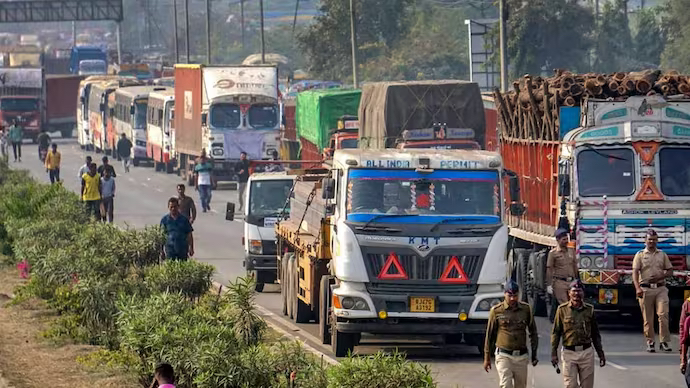
- 03 Jan 2024
Why is it in the News?
The All India Motor Transport Association (AIMTC) decided to end the nationwide truck drivers protests against the new hit-and-run law, after a meeting with Union Home Secretary Ajay Bhalla.
What is the New Hit-and-run Law?
The recently enacted Bharatiya Nyay Sanhita introduces stringent penalties for hit-and-run incidents in India.
- The law specifies that an accused individual causing a fatal crash and fleeing the scene without reporting to authorities could face imprisonment for up to 10 years along with a fine of Rs 7 lakh.
- Bharatiya Nyay Sanhita has established two distinct categories under the umbrella of "causing death by negligence."
- The first category addresses causing death through any rash or negligent act that does not amount to culpable homicide.
- Offenders in this category may face imprisonment for up to five years and a fine.
- The second category deals with causing death through rash and negligent driving, not amounting to culpable homicide.
- If the individual escapes without promptly reporting the incident to a police officer or magistrate, they could be subjected to up to 10 years of imprisonment and a fine.
What was the Hit-and-run Law Before?
- The old, British-era Indian Penal Code (IPC) did not have a specific provision for hit-and-run cases.
- Actions in such cases were taken under Section 304 A of the IPC.
- According to that section, a person causing the death of another due to a rash or negligent act could invite a jail term of a maximum of 2 years or be fined.
- "Whoever causes the death of any person by doing any rash or negligent act not amounting to culpable homicide, shall be punished with imprisonment of either description for a term which may extend to 2 years, or with fine, or with both," the section stated.
- All cases of hit-and-run along with other forms of activities that came under the ambit of causing death by a "rash and negligent act" were lodged under Section 304 A of the IPC.
South Africa files genocide case against Israel at ICJ: Why the African nation supports Gaza so strongly (Indian Express)
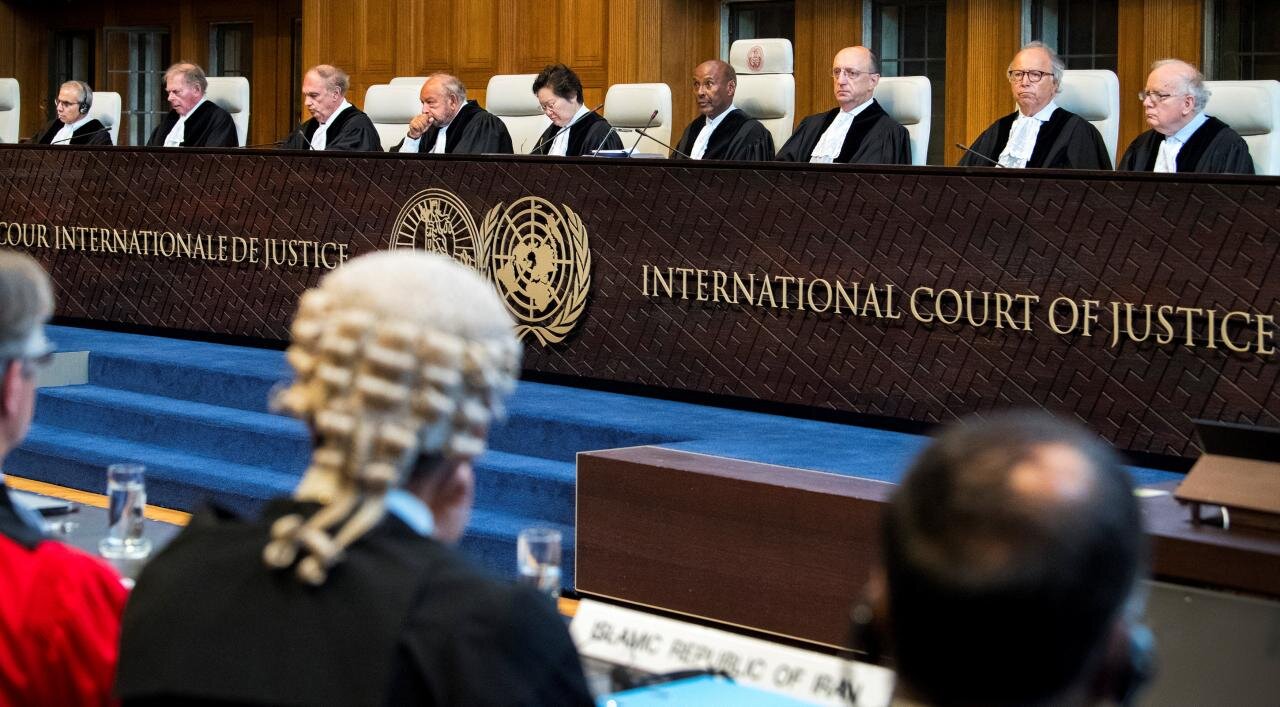
- 03 Jan 2024
Why is it in the News?
Amid international criticism of Israel for its continued bombing of Gaza, South Africa recently moved the International Court of Justice (ICJ), for an urgent order declaring that Israel was in breach of its obligations under the 1948 Genocide Convention.
About the International Court of Justice (ICJ):
- The International Court of Justice (ICJ) is the principal judicial organ of the United Nations (UN).
- It was established in June 1945 by the Charter of the United Nations and began work in April 1946.
- The seat of the Court is at the Peace Palace in The Hague (Netherlands).
- Of the six principal organs of the United Nations, it is the only one not located in New York (United States of America).
- The Court’s role is to settle, in accordance with international law, legal disputes submitted to it by States and to give advisory opinions on legal questions referred to it by authorized United Nations organs and specialized agencies.
- Its official languages are English and French.
- Powers and Functions: The ICJ handles two types of cases—contentious cases, involving legal disputes between States, and advisory proceedings, responding to legal questions referred by UN organs and specialized agencies.
- Contentious cases involve only UN member States or other States that have accepted the Court's jurisdiction.
- While the Court's judgments in contentious cases are final and binding, advisory opinions are not binding.
- Deciding disputes in line with international law, the ICJ relies on conventions, international custom, general principles, judicial decisions, and expert writings.
- Composition: The Court is composed of 15 judges, who are elected for terms of office of nine years by the United Nations General Assembly and the Security Council.
- It is assisted by a Registry, its administrative organ.
- To be elected, a candidate must secure an absolute majority in both UNGA and UNSC.
- The Court sees one-third of its composition renewed every three years, and judges are eligible for re-election.
- Once elected, judges declare their commitment to the impartial and conscientious exercise of their powers.
- They act independently, detached from any governmental influence.
- This comprehensive structure ensures the ICJ's role as a pivotal entity in the international legal landscape, providing judgments on contentious matters and advisory opinions on significant legal questions.
About the Genocide Convention 1948:
- The term 'genocide,' often casually employed in reference to attacks on various communities globally, finds its precise definition in the UN's Convention on the Prevention and Punishment of the Crime of Genocide, presented to the General Assembly in 1948.
- According to this Convention, genocide entails any of the following acts carried out with the intent to wholly or partially destroy a national, ethnic, racial, or religious group:
- Killing members of the group.
- Causing serious bodily or mental harm to group members.
- Deliberately inflicting conditions of life to bring about the group's physical destruction.
- Imposing measures to prevent births within the group.
- Forcibly transferring children of one group to another.
- This Convention categorizes genocide as a crime, applicable irrespective of whether it occurs during wartime or peacetime. India ratified the convention in 1959, although no specific legislation addressing genocide has been enacted to date.
NREGS payments: Aadhaar-based system mandatory now, Govt says may consider exemptions on case basis (Indian Express)
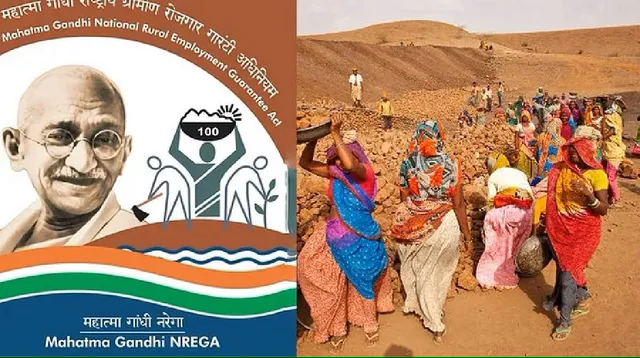
- 02 Jan 2024
Why is it in the News?
With the Aadhaar-based payment system (ABPS) now mandatory for payment of wages to NREGS workers, the Government on Monday said it may consider exemptions on a “case-by-case basis” should any gram panchayat face “technical issues”.
What is the Aadhaar Enabled Payment System (AePS)?
- The Aadhaar Enabled Payment System (AEPS) is a payment service that allows a bank customer to use Aadhaar as his/her identity to access his/her Aadhaar-enabled bank account and perform basic banking transactions like balance enquiry, cash withdrawal, remittances through a Business Correspondent.
- It is a service developed by the National Payments Corporation of India.
Key features of AePS:
- Aadhaar-linked transactions: AePS enables Aadhaar card holders to make transactions through their Aadhaar-linked bank accounts, similar to debit/credit card transactions.
- Biometric authentication: Transactions are completed by submitting the Aadhaar number and biometric details (iris or fingerprint scan) at Points of Sale (PoS) or micro ATMs, using Aadhaar authentication.
- Bank account privacy: Users are not required to share their bank account details during the transaction, enhancing privacy and security.
- Fund transfers: AePS allows users to transfer funds between bank accounts, providing a convenient way to send and receive money.
- Secure transactions: AePS transactions are considered safe and secure as they require biometric authentication, ensuring the identity of the user.
- By leveraging the Aadhaar infrastructure, AePS simplifies and secures financial transactions, making it accessible to a wide range of individuals, particularly those who may not have access to traditional banking services.
ABPS Implementation for NREGS:
- Since 2017, the Mahatma Gandhi National Rural Employment Guarantee Scheme (NREGS) has adopted the Aadhaar-enabled Payment System (ABPS).
- This system involves linking workers' 12-digit Aadhaar numbers with their job cards and NREGS workers' bank accounts.
- With nearly universal coverage of Aadhaar numbers among the adult population, the Government of India opted to expand ABPS for beneficiaries within the scheme.
- Payments are exclusively directed through ABPS to the associated accounts, ensuring a secure and swift method of fund transfer.
- Out of the total 14.33 crore active beneficiaries, Aadhaar has been successfully linked for 13.97 crore individuals.
- Among these Aadhaar-linked beneficiaries, 13.34 crore Aadhaar authentications have been completed, making 81.89% of active workers eligible for ABPS.
- In July 2023, approximately 88.51% of wage payments were executed through the Aadhaar-enabled Payment System.
Mandatory Adoption of ABPS for NREGS Workers:
- Initially mandated by the Rural Development Ministry starting from February 1, 2023, the implementation of the Aadhaar-enabled Payment System (ABPS) witnessed several extensions, ultimately being permitted until December 31, 2023.
- As of January 1, 2024, ABPS has become obligatory for NREGS workers, with no further extensions granted to states beyond December 31.
- The integrated approach of ABPS and the National Automated Clearing House (NACH), an interbank system, will be employed for bulk payments, including subsidies and salaries.
- The use of ABPS for wage payments to unskilled workers ensures the seamless transfer of benefits to their bank accounts, even in instances of frequent changes in the beneficiary's bank account.
Exemption Decision in the Event of Technical Issues:
- If a gram panchayat encounters technical or Aadhaar-related challenges, the Government of India may evaluate exemptions from Aadhaar-enabled Payment System (ABPS) requirements on a case-by-case basis until the resolution of the issue.
- This announcement followed criticism from opposition parties, labeling ABPS as a harsh New Year measure that could potentially exclude millions of the most vulnerable and marginalized Indians from accessing basic income.
- The government was accused of "weaponizing technology, especially Aadhaar.
India, Pakistan exchange list of nuclear installations and facilities (ET)
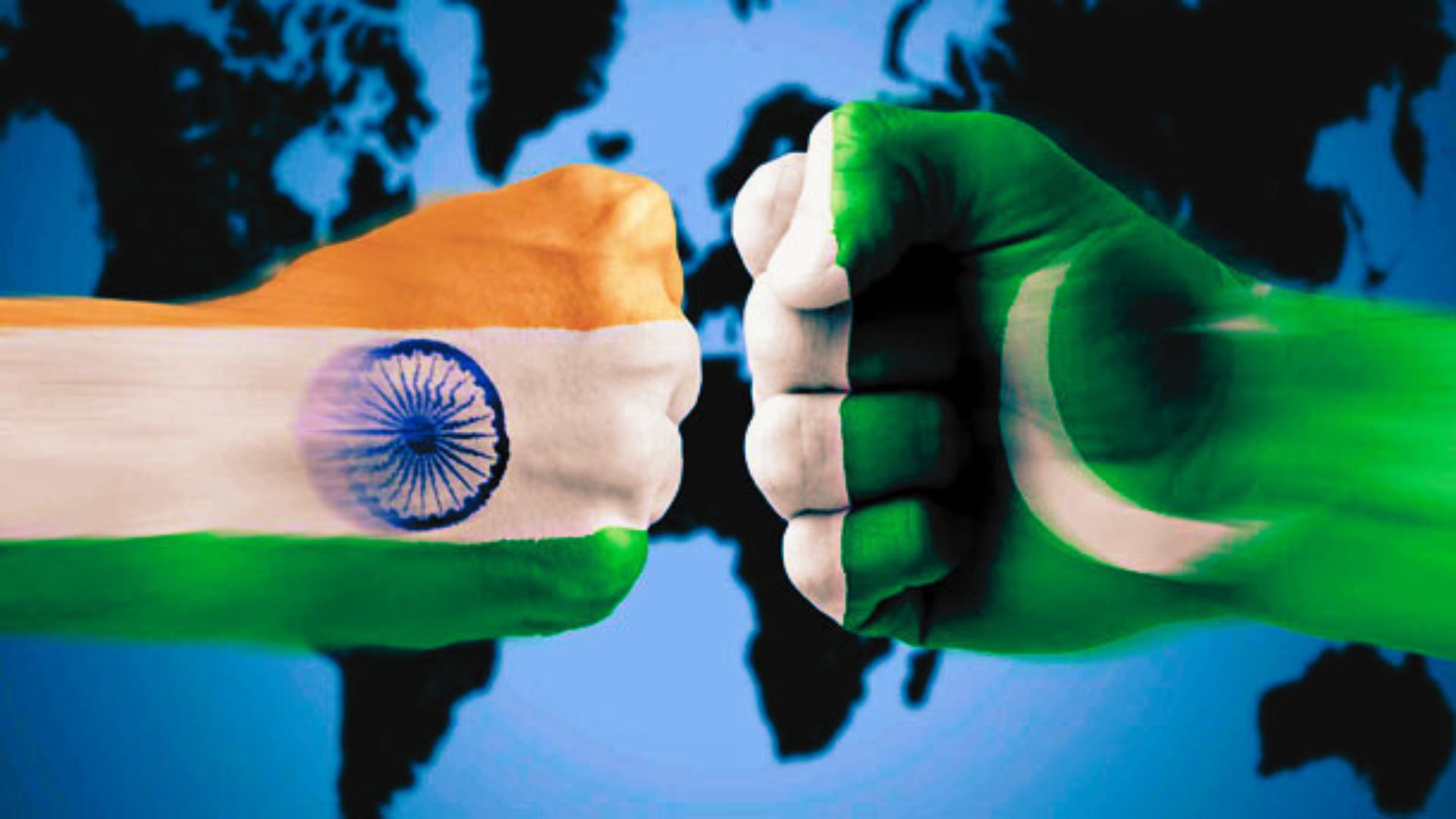
- 02 Jan 2024
Why is it in the News?
India and Pakistan exchanged the list of nuclear installations and facilities, covered under the Agreement on the Prohibition of Attack against Nuclear Installations and Facilities between the two countries.
About the Prohibition of Attack against Nuclear Installations and Facilities:
- The Agreement on the Prohibition of Attack against Nuclear Installations and Facilities, also known as the India-Pakistan Non-Attack Agreement, was signed on 31 December 1988 and became effective on 27 January 1991.
- It was signed by the then Pakistani PM Benazir Bhutto and Indian PM Rajiv Gandhi.
- According to this agreement, both India and Pakistan are required to annually communicate the list of nuclear installations and facilities covered by the agreement on the first of January of each calendar year.
- The agreement stipulates that neither party shall engage, directly or indirectly, in any actions aimed at causing destruction or damage to any nuclear installation or facility in the other country.
- The term 'nuclear installation or facility' encompasses nuclear power and research reactors, fuel fabrication, uranium enrichment, isotopes separation, reprocessing facilities, as well as any other installations involving fresh or irradiated nuclear fuel and materials in any form, along with establishments storing significant quantities of radioactive materials.
Need for the Agreement:
- In 1986, heightened concerns arose when the Indian army conducted a large-scale exercise named 'Brasstacks,' prompting fears of a potential assault on nuclear facilities.
- Subsequently, negotiations ensued between the two nations aimed at fostering an understanding regarding the management of nuclear weapons, ultimately leading to the formulation of the treaty.
Importance of the Agreement:
- Both nations reiterate their dedication to enduring peace and the cultivation of amicable and harmonious bilateral relations.
- They recognize the significance of confidence-building measures in fostering such relations built on mutual trust and goodwill.
- The potential consequences of even a limited nuclear exchange between India and Pakistan are grave, with the potential to cause the loss of 20 million lives within a week.
Radiocarbon dating brought the first verifiable way to keep time to many fields of science, significantly transforming them (The Hindu)
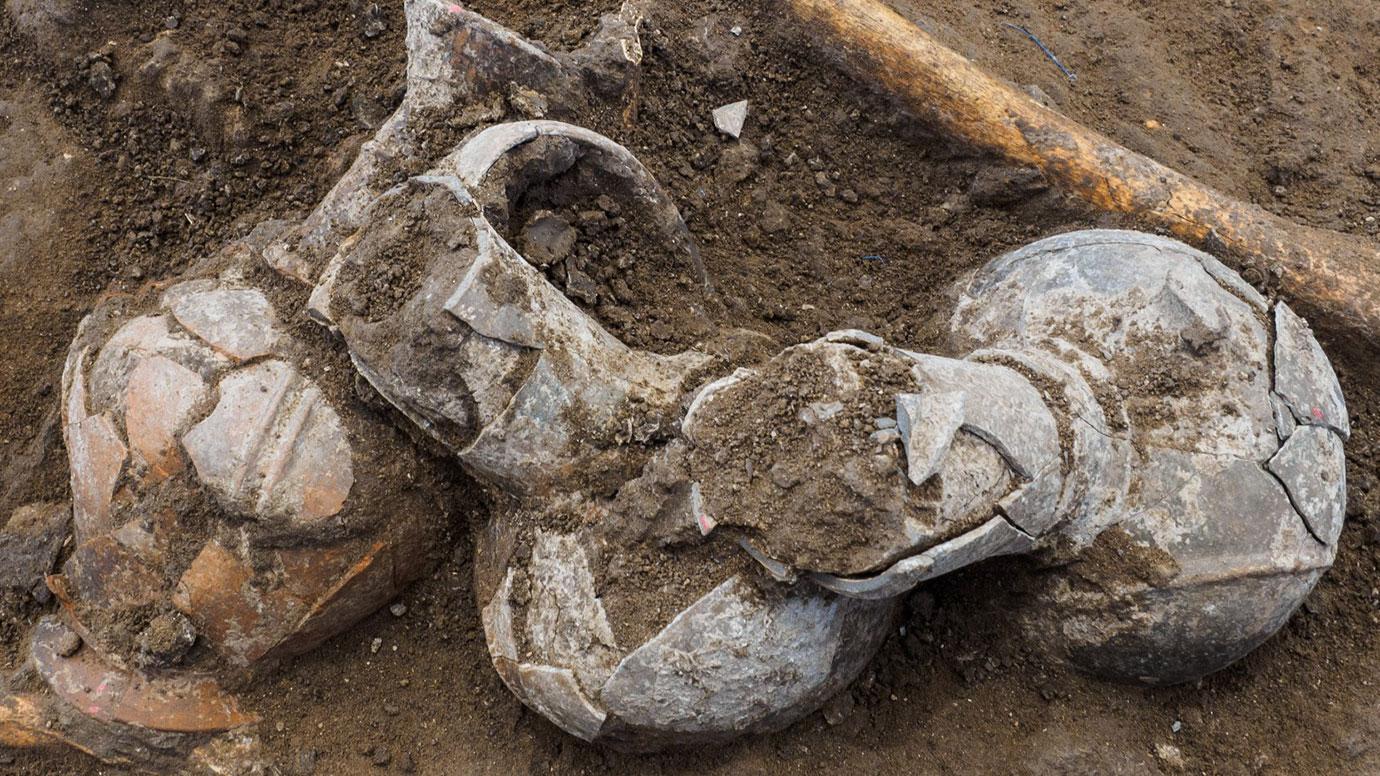
- 02 Jan 2024
Why is it in the News?
From thermodynamics to GPS, from social systems theory to studies of consciousness, time plays an essential role in how we study, interpret, and understand the natural universe and the peoples and technologies that occupy it.
What is radiocarbon dating?
- Radiocarbon dating is a technique employed to determine the age of an object by utilizing radiocarbon, a specific isotope known as carbon-14.
- Formation of Carbon-14: Carbon-14 is generated in the Earth's atmosphere through a process initiated by cosmic rays—energetic streams of charged particles originating from outer space.
- These cosmic rays collide with atmospheric gas atoms, releasing neutrons in the process.
- When these neutrons interact with nitrogen-14 isotopes, carbon-14 is produced.
- Given the continuous influx of cosmic rays penetrating the Earth's atmosphere, a constant production of carbon-14 takes place.
- Subsequently, this newly formed carbon-14 readily combines with atmospheric oxygen, resulting in the creation of radioactive carbon dioxide.
- The carbon-14 compound enters various ecosystems through the carbon cycle, including plants (via photosynthesis), animals (through the consumption of plants), and other forms of biomass.
- It assumes the form of carbon dioxide and other carbon compounds, facilitating its diffusion into the Earth's diverse ecosystems.
- This ensures that the concentration of carbon-14 in the atmosphere remains comparable to its concentration in the planet's other biospheres.
How does radiocarbon dating work?
- The process of radiocarbon dating hinges on the principles of carbon exchange within living organisms, such as the human body.
- While alive, these organisms continuously interact with their environment by engaging in activities like breathing, consuming food, excreting, and shedding skin.
- During these dynamic processes, carbon-14 is both released from the body and replenished, maintaining a relatively constant concentration within the organism that is in equilibrium with its surroundings.
- However, upon death, the cessation of these activities results in a diminishing concentration of carbon-14 in the body due to radioactive decay.
- As time elapses, the quantity of carbon-14 steadily decreases, and its decay rate can be theoretically predicted.
- Radiocarbon dating assesses the age of an object by measuring the remaining amount of carbon-14, a value used by scientists or computers to estimate the time since the organism's demise.
- In contemporary radiocarbon dating methodologies, advanced techniques are employed, with one of the most sensitive approaches being accelerator mass spectrometry (AMS).
- This sophisticated method allows for the analysis of organic samples as minute as 50 mg, enhancing the precision and accuracy of radiocarbon dating.
What are the limitations of carbon-14 dating?
- Age Restriction: Carbon-14 dating is effective for dating organic materials up to approximately 60,000 years old.
- Sample Size Requirements: Conventional radiocarbon dating necessitates relatively large samples, typically ranging from 10 to 100 grams (0.35 to 3.5 ounces), depending on the material being analyzed.
- Advancements in Sample Size: While newer dating methods have emerged that can work with smaller sample sizes, allowing for analyses with quantities as low as 20 to 50 milligrams (0.0007 to 0.0018 ounces).
- Contamination Sensitivity: Radiocarbon samples are highly susceptible to contamination, making it crucial for accurate dating that they remain clean and well-preserved throughout the analysis process.
Two-Month-Old Infant Breaks Records as Youngest to Undergo Successful Bone Marrow Transplant in Mumbai (Times Now)

- 02 Jan 2024
Why is it in the News?
A two-month-old girl, diagnosed with the rare disease ‘bubble baby syndrome,' becomes the youngest to receive a bone marrow transplant from an unrelated donor at Bai Jerbai Wadia Hospital for Children in Parel.
What is Bubble Baby Syndrome?
- 'Bubble baby syndrome,' medically known as Severe combined immunodeficiency (SCID) is a group of rare, life-threatening diseases that cause a child to be born with very little or no immune system.
- As a result, the child’s body is unable to fight off infections and can become very sick from infections like chickenpox, pneumonia and meningitis and can die within the first year of life.
- This condition falls under the category of primary immune deficiencies.
- The term "Bubble Baby Syndrome" is derived from the necessity for affected individuals to live in a highly controlled environment, as exposure to ordinary surroundings can pose fatal risks to children with SCID.
- What happens in Severe combined immunodeficiency (SCID)?
- In the developing fetus, the immune system originates in the bone marrow, where versatile stem cells can differentiate into three crucial types of blood cells: red blood cells, white blood cells (WBCs), and platelets.
- Among these, white blood cells, particularly lymphocytes, play a vital role in safeguarding the body against infections.
- Lymphocytes consist of two main types: B-cells and T-cells.
- T-cells identify, attack, and eliminate invaders, while B-cells produce antibodies that "remember" infections for future defence.
- SCID is classified as a "combined" immunodeficiency as it impacts both of these infection-fighting white blood cell types.
- In SCID, the child's immune system exhibits either an insufficient quantity of lymphocytes or dysfunctional lymphocytes.
- Consequently, the compromised immune system struggles to combat various germs such as viruses, bacteria, and fungi, leading to recurrent and severe infections.
- Causes: SCID results from inherited mutations in multiple genes, with one or both birth parents passing down the condition to their child.
- Symptoms: Although infants with SCID may initially appear healthy, signs of the disorder may manifest shortly after birth. These symptoms include
- Failure to thrive
- Chronic diarrhoea
- Frequent, often severe respiratory infections
- Oral thrush (a type of yeast infection in the mouth)
- Other challenging-to-treat bacterial, viral, or fungal infections
- Treatment: SCID is considered a pediatric emergency, and without prompt intervention, affected babies are unlikely to survive beyond their first birthday.
- The primary treatment method involves a stem cell transplant, also known as a bone marrow transplant.
- In this procedure, the child receives stem cells from a donor with the hope that these new cells will reconstruct the compromised immune system, offering a chance for a healthier and more sustainable life.
Bone marrow transplant
- The most common treatment for SCID is an allogeneic bone marrow transplant, which will introduce normal infection-fighting cells into your child’s body.
- Allogeneic transplants use stem cells from a relative or an unrelated donor from the National Marrow Donor Program.
- An allogeneic bone marrow transplant involves taking cells from the bone marrow (the soft, spongy tissue found in bones) of a healthy donor and giving them to a child after the child’s diseased bone marrow has been eliminated.
- Doctors at Children’s Hospital will screen your child’s family for potential bone marrow matches.
- While a tissue-matched sibling offers the greatest chance of curing SCID, they are not often available.
- Instead, most patients receive bone marrow donations from their parents or unrelated matched donors.
Govt extends PLI scheme for the auto sector by a year with 'partial amendments' (Business Standard)

- 02 Jan 2024
Why is it in the News?
Recently, the Ministry of Heavy Industries announced the extension of the Production Linked Incentive (PLI) Scheme for Automobile and Auto Components by one year with "partial amendments".
PLI Scheme for Automobile Sector:
- The Union Cabinet approved the PLI-Auto Scheme in 2021, allocating a budgetary outlay of Rs. 25,938 crore for five years (FY2022-23 to FY2026-27).
- Aimed at enhancing the production of Advanced Automotive Technology (AAT) Products, the PLI-AUTO Scheme is designed to promote extensive localisation for AAT products and facilitate the development of both domestic and global supply chains.
- This scheme primarily targets Zero Emission Vehicles (ZEVs), specifically Battery Electric Vehicles and Hydrogen Fuel Cell Vehicles.
- In a recent amendment, the incentive period was extended to cover five consecutive financial years, commencing from the financial year 2023-24, with disbursement scheduled for the subsequent financial year, 2024-25.
- The amended scheme stipulates that approved applicants can avail benefits for five consecutive financial years, but the eligibility period will not extend beyond the financial year ending on March 31, 2028.
- Additionally, the amendments specify that if an approved company fails to meet the determined threshold for an increase in Determined Sales Value over the initial year's threshold, it will not receive any incentives for that particular year.
What is the Production-Linked Incentive (PLI) Programme?
- Around 5 years ago, the Indian government aimed to stimulate domestic manufacturing by encouraging more companies to produce goods.
- Recognizing manufacturing as a crucial driver of economic growth with a multiplier effect, wherein each job and investment in manufacturing positively influences other sectors, the government introduced the Production-Linked Incentive (PLI) scheme.
- Under the PLI scheme, both foreign and domestic companies engaged in manufacturing receive financial incentives from the government.
- The annual incentive payout is determined as a percentage of the revenue generated by these companies and is applicable for a period of up to five years.
10th phase of Sagar Parikrama covering AP and Puducherry coastal districts to start from Mon (PIB)
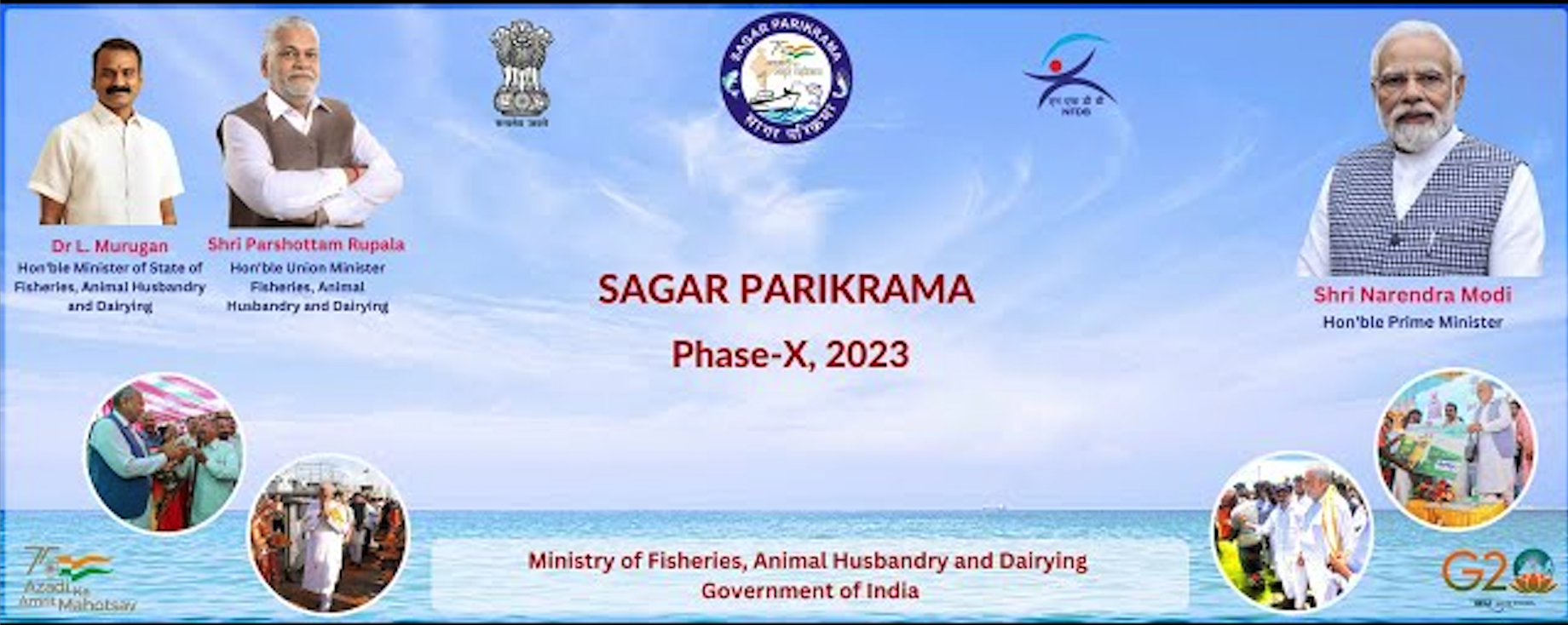
- 01 Jan 2024
Why is it in the News?
Union Minister for Fisheries, Animal Husbandry and Dairying Shri Parshottam Rupala along with Minister of State Dr L Murugan will participate in the Sagar Parikrama (Phase X) event being organized from 1st January 2024 to 6th January 2024 at various locations of Andhra Pradesh and Puducherry
About Sagar Parikrama Phase-10:
- Sagar Parikrama Phase-X is poised to be a pivotal event in the ongoing efforts to promote sustainable fisheries, empower stakeholders, and contribute to the economic growth of coastal communities.
- It will continue and cover the remaining coastal districts of Andhra Pradesh namely Nellore, Prakasam, Bapatla, Krishna, West Godavari, Konaseema, Kakinada, Visakhapatnam, Vizianagaram, Srikakulam and Yanam (Union Territory of Puducherry).
What is “Sagar Parikrama”?
- Sagar Parikrama is a testament to the transformative power of visionary leadership for the welfare of the fishing community and coastal development.
- It is an initiative taken by the Government, with an aim to resolve the issues of the fishers, and other stakeholders and facilitate their economic upliftment through various fisheries’ schemes and programs being implemented by the Government such as Pradhan Mantri Matsya Sampada Yojana (PMMSY) and Kisan Credit Card for Fisheries (KCC).
- It represents a transformative voyage along the coastal belt, symbolizing unity with fisherfolk, fish farmers, and all stakeholders in the spirit of the 75th Azadi Ka Amrit Mahotsav.
- The Sagar Parikrama Yatra features the interactions of ministers with fishermen, fish farmers and other relevant stakeholders.
- State fisheries officials, fishermen representatives, fish farmers, entrepreneurs, fishermen cooperative society leaders, professionals, scientists, and other stakeholders from across the nation will accompany the events.
- The journey of the first phase of “Sagar Parikrama” started from Mandvi, Gujarat on 5th March 2022.
- So far, the total 9 phases of Sagar Parikrama have been covered in the coastal States/UTs of Gujarat, Daman & Diu, Maharashtra, Goa, Karnataka, Andaman & Nicobar, Kerala, Tamil Nadu, Puducherry, and part of Nellore district of Andhra Pradesh during initiation of its tenth phase.
- Nodal Ministry: Ministry of Fisheries, Animal Husbandry & Dairying.
- Sagar Parikrama is making a notable impact on improving the quality of life and economic well-being of the fishing community.
- By providing a platform for direct interaction with Ministers and senior government officials, the initiative ensures that the concerns and issues of fishermen and fish farmers are addressed promptly.
How two choke points could turn into a perfect storm for global trade (Indian Express)
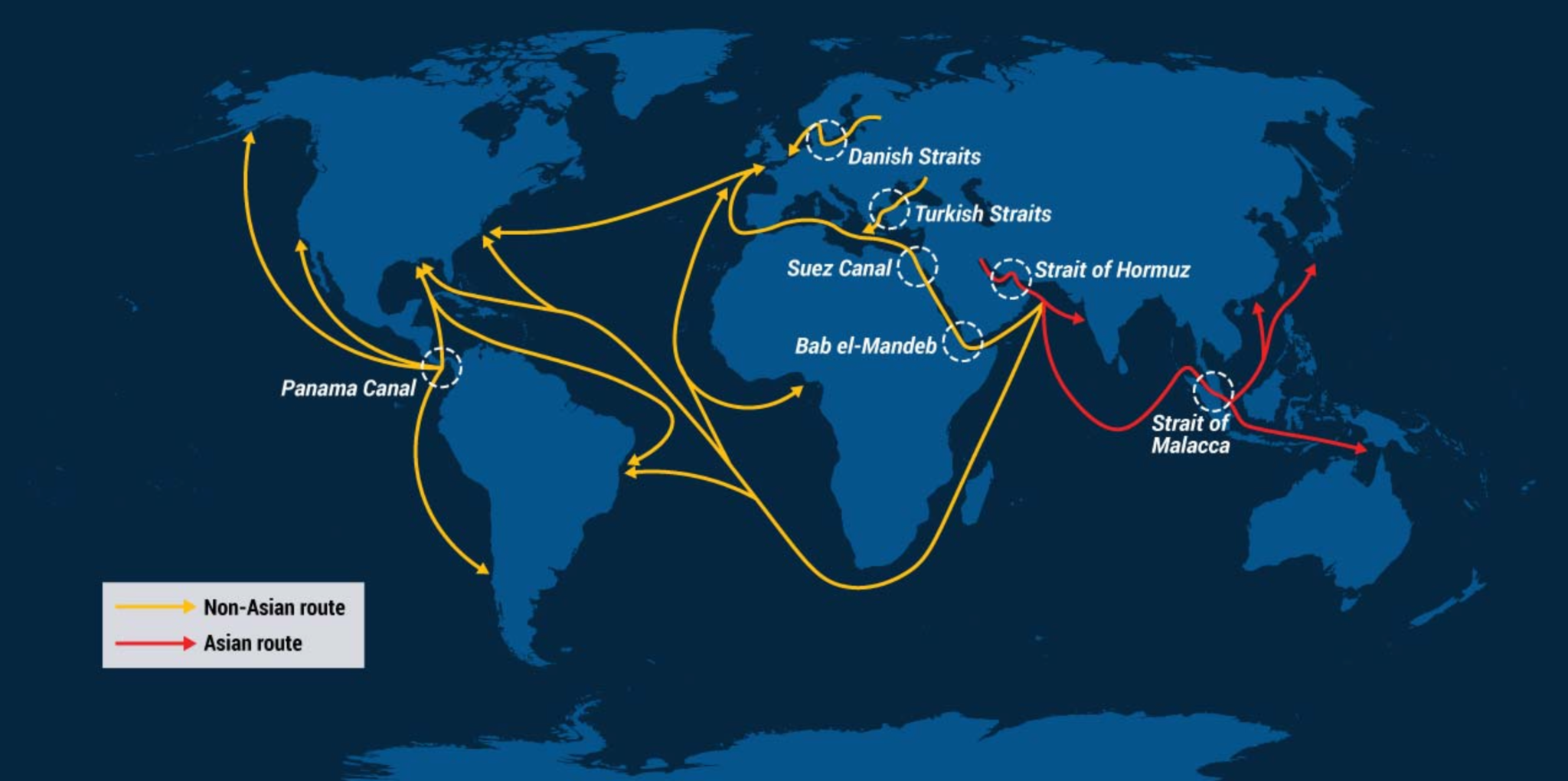
- 01 Jan 2024
Why is it in the News?
Shipping giant Maersk on Sunday suspended passage of its vessels through the Red Sea route for 48 hours after fresh attacks by Yemen-based Houthi rebels. This comes barely a week after the company announced plans to resume operation citing the deployment of a US-led military operation to guard the crucial sea route.
What do the ongoing Red Sea and Panama Canal crises mean for world trade?
- A disruption in maritime transport is a crucial concern for the world economy, as over 80 per cent of the global goods trade is carried by sea.
- The share of trade via sea is much higher for developing countries such as India.
- Currently, two important shipping routes are facing blockages.
- Bab-el-Mandeb Strait which leads to the Suez Canal in the Red Sea region connects Asia and parts of North East and East Africa to Europe.
- The 100-year-old Panama Canal connects the Atlantic and Pacific Oceans.
- Both these routes are among the busiest in the world and a blockage results in forcing global shipping lines to take longer alternate routes, pushing up freight rates.
- The disruption at the Red Sea route, for instance, is estimated to push the prices of Indian agricultural products by 10 to 20 per cent, as shipments would be routed around Africa via the Cape of Good Hope.
- This comes at a time when much of the West is witnessing higher interest rates to curb inflation.
- Higher prices could further fuel demand concerns for global and Indian exporters.
Why is trade via the Panama Canal slowing?
- Shipping via the Panama Canal has dropped by over 50 per cent due to drought conditions at the 51-mile stretch.
- Due to the shortage of water, ships moving from Asia to the US are being forced to use the Suez Canal, which takes six more days compared to the Panama Canal.
- Moreover, Panama is facing its driest rainy season in decades, raising fears of prolonged canal bottlenecks.
How have the attacks impacted freight rates?
- Ever since the attacks along the Bab-el-Mandeb Strait began, global shipping firms have begun imposing war risk surcharges over and above the normal freight rates.
- Indian exporters said that freight rates for Indian shipments headed to Europe and Africa could surge as much as 25-30 per cent if the ongoing security concern along the Red Sea trade route continues.
- This is troubling, as the European Union is one of India’s second-largest export destinations.
- Slowing demand from the region has impacted India’s labour-intensive sectors, such as textiles, gems and jewellery exports.
Panama Canal
- It is an artificial canal that spans the Isthmus of Panama and links the Atlantic and Pacific oceans.
- Together with the Suez Canal, it is one of the two most strategically important man-made waterways in the world.
- It has a length of around 80 kilometres.
- The United States constructed the canal between 1904 and 1914, and on August 15, 1914, it was formally inaugurated.
- Since 1999, when control of the Canal was moved from the United States to Panama, it has been owned and operated by the Republic of Panama.
- To make it easier for ships to cross the continental divide, the Panama Canal is made up of a network of locks that raise and decrease the water level.
Over 1 lakh people availed free treatment under Delhi Arogya Kosh scheme till October (Indian Express)

- 01 Jan 2024
Why is it in the News?
As many as 1.13 lakh people have availed of free health treatment being provided under the city Government’s ‘Delhi Arogya Kosh’ scheme, till October last year, according to government data.
What is the 'Delhi Arogya Kosh' Scheme?
- Constituted in 2011, the Delhi Arogya Kosh (DAK) has five components/schemes:
- Financial assistance to EWS patients
- Free High-End Radiological Diagnostic Test Scheme
- Cashless Specified Surgeries scheme
- RTA (Road Traffic Accident) Scheme (‘i.e. Farishtey Scheme’) and
- Cashless Dialysis Scheme.
- There are 4 schemes under the name of Delhi Arogya Kosh which include financial support from the government for medical implants, various types of surgeries, 136 types of medical tests and the Farishtey scheme for treatment of accident victims.
- Under this scheme, if any citizen of Delhi goes to Delhi government hospitals for treatment and has to face a waiting period for examination or treatment and the patient needs immediate care, then the patient can avail the above-mentioned services in a private hospital with a doctor’s reference.
- Cashless check-ups and treatment will be provided for them in all the empanelled hospitals and the cost of this will be borne by the government.
- Under this scheme, every citizen of Delhi who has Delhi's voter card can get treatment.
- Children below 19 years of age can avail this facility based on their parents' voter cards.
Schemes Under 'Delhi Arogya Kosh':
- Financial assistance up to 5 lakh for different types of medical implants: Under this scheme, the government provides financial assistance up to Rs 5 lakh to the patients.
- To avail of the benefit of this scheme, patients need to submit their application and relevant documents.
- After their screening, the government bears the cost of implants and the treatment of the patient up to Rs 5 lakh.
- It is a cashless scheme.
- 136 free medical test facilities at private labs for patients: In the case of a long waiting list at government hospitals, patients can get the tests done at private hospitals or labs.
- Under this scheme, patients can get about 136 types of medical tests done for free.
- Under this, while waiting in a government hospital, patients can get all medical tests from private hospitals and labs free of cost, including X-ray, MRI, PET scan, CT scan and ultrasound.
- Free Surgery Scheme for patients to get the surgery done in private hospitals: If a patient goes to Delhi government hospital for treatment and has to undergo surgery but the waiting time is more than 30 days, then patients can avail free surgery in private hospitals under the 'Free Surgery Scheme' under this scheme.
- The government bears all the expenses incurred in the surgery.
- Accident victims’ free treatment : The Farishtey Scheme is also covered under Delhi Arogya Kosh.
- Under this scheme, if a person meets with an accident, he or she is provided immediate treatment in a government hospital for free and if the patient gets admitted within 72 hours of an accident, he or she can also avail treatment at a private hospital for free.
-
- All the expenses of patients will be borne by the Delhi government.
SC’s translation projects raced ahead in 2023 as retd. HC judges and law clerks help AI (The Hindu)
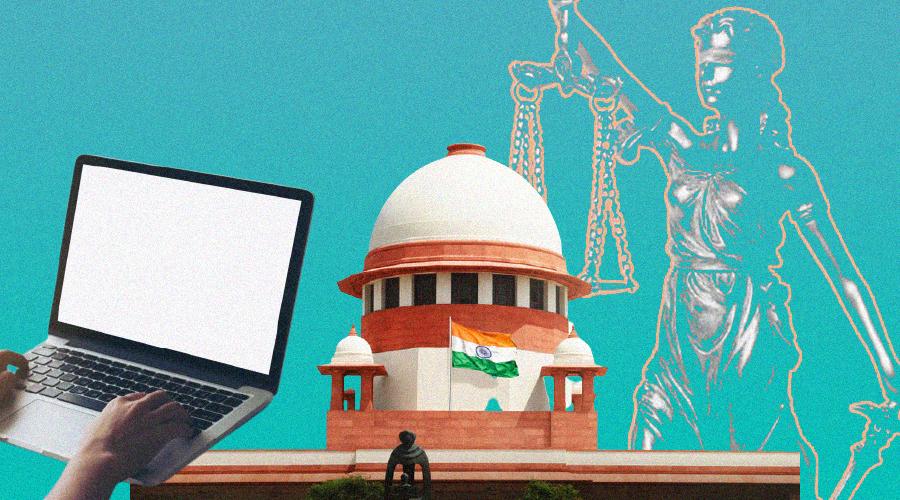
- 01 Jan 2024
Why is it in the News?
The Supreme Court’s monumental project of translating all of its 36,000 judgments into Scheduled Languages achieved unprecedented speed in 2023, with the E-SCR portal starting with just 2,238 translated judgments in January and ending the year with over 31,000.
Background:
- In 2023, the Supreme Court of India embarked on a groundbreaking venture to translate its extensive archive of 36,000 judgments into Scheduled Languages.
- This innovative initiative, powered by collaboration between retired High Court judges, law clerks, and artificial intelligence, has made significant strides.
- However, concerns linger regarding the practical application of these translated judgments and the absence of a standardized legal vocabulary across diverse regional languages.
- The launch of the E-SCR portal in 2023 marked a modest beginning with 2,238 translated judgments in January, reaching a commendable milestone of over 31,000 rulings translated by the year's end.
- Recent statistics reveal that Hindi leads with the highest number of translated judgments at 22,396, followed by Punjabi (3,572), Kannada (1,899), Tamil (1,172), and Gujarati (1,112).
- While the translation speed witnessed a significant improvement in 2023, legal experts express concerns about the practical utility of translated judgments, particularly when High Courts, except in the Hindi-speaking States, cannot conduct proceedings in regional languages.
What is the Supreme Court Vidhik Anuvaad Software (SUVAS)?
- SUVAS was introduced in November 2019 by the then-Chief Justice of India (CJI) S.A. Bobde.
- It was created to encourage and ensure the use of regional languages in judicial proceedings.
- It is an artificial intelligence (AI)--trained machine translation tool.
- Constitutional Standing: While Article 348(1)(a) of the Indian Constitution mandates that proceedings in the Supreme Court and every High Court be conducted in English, Article 348(2) provides a provision.
- It allows a State Governor, with the President's consent, to authorize the use of Hindi or another state language in the High Court of that particular State.
- In this context, SUVAS is vested with authority under Article 348, serving as a pivotal tool to promote linguistic diversity within the constitutional framework.
Planning to invest in green deposits? RBI releases latest guidelines to explain key provisions (Live Mint)
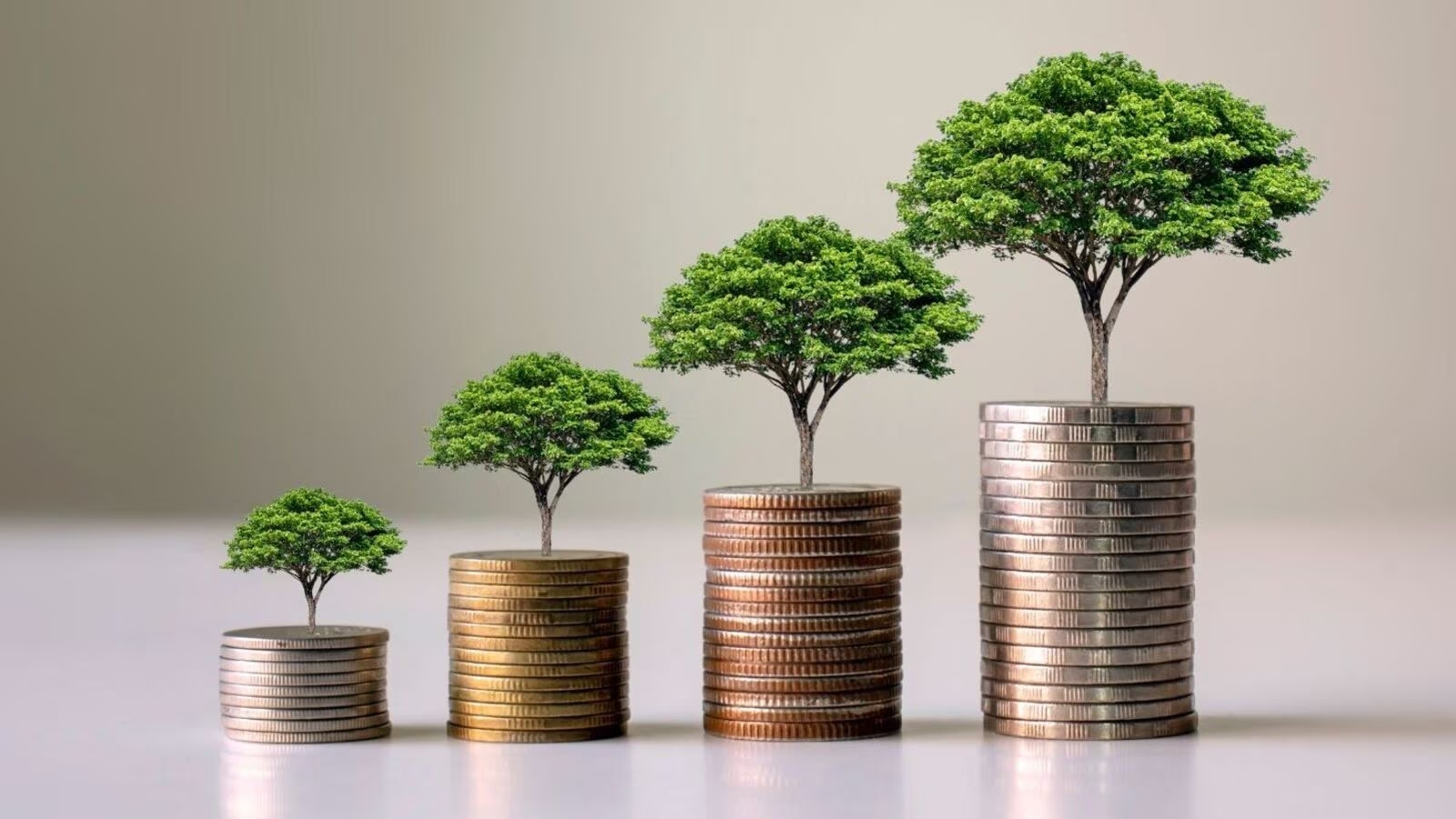
- 01 Jan 2024
Why is it in the News?
In a recent guideline, the Reserve Bank of India (RBI) said banks and Non-Banking Financial Companies (NBFCs) don’t need to raise green deposits.
What are Green Deposits?
- A green deposit is essentially a fixed-term deposit designed for individuals seeking to invest in eco-friendly projects.
- Similar to a standard Fixed Deposit scheme, the green deposit offers interest to investors and has a predetermined term.
Key Features:
- Allocation to Green Finance: The funds deposited in a green deposit are specifically earmarked for allocation to green finance initiatives, promoting environmentally conscious investments.
- Environmentally Friendly Focus: Also referred to as an environmentally friendly fixed deposit, this financial instrument encourages sustainable development by directing funds toward projects related to renewable energy, clean technology, and other environmentally beneficial initiatives.
- Priority Sector Classification: Green activities or projects financed through this framework may be classified under the priority sector, provided they meet the requirements outlined in the Priority Sector Lending (PSL) guidelines of the Reserve Bank of India (RBI).
- Overdraft Facility: Banks are permitted to offer overdraft facilities to customers against their Green Deposits, providing added flexibility.
- Currency Denomination: As per the current framework, green deposits can only be denominated in Indian Rupees.
- Insurance Coverage: Deposits raised under this framework are covered by the Deposit Insurance and Credit Guarantee Corporation (DICGC) in accordance with the Deposit Insurance and Credit Guarantee Corporation Act, 1961, and the relevant regulations.
- Renewal or Withdrawal: Upon maturity, depositors have the option to either renew or withdraw their green deposits, providing flexibility and choice.
Advantages of Green Deposits:
- Contribution to Climate-Friendly Initiatives: Green deposits empower depositors to actively participate in climate-friendly initiatives, aligning with India's net-zero goals and promoting environmental sustainability.
- Support for Socially Responsible Activities: Although higher interest rates may not be the primary focus, depositors indirectly contribute to socially and environmentally responsible endeavours.
- Their funds play a pivotal role in supporting activities that benefit the community and the planet.
- Positive Environmental Impact: By investing in green deposits, depositors contribute to positive outcomes such as reduced emissions, improved air quality, and sustainable resource allocation.
- These actions foster positive externalities, creating a healthier environment for all.
- Contribution to Reduced Income Inequality: The support for eco-friendly initiatives and fair resource allocation facilitated by green deposits contributes to long-term reductions in income inequality, fostering a more equitable and sustainable society over time.
Challenges Associated with Green Deposits:
- Design Limitations: Flaws in the design of green deposit frameworks may restrict the scope of eligible green projects that banks can invest in, limiting the diversity of environmentally beneficial initiatives.
- Perceived Reality vs. Impact: There is a concern that some green investment products may serve more as a psychological boost for investors rather than delivering substantial environmental benefits.
- The actual impact on the environment may not align with the positive perception created.
- Uncertain Project Sustainability: The long-term sustainability of green projects funded by banks remains uncertain, raising questions about the enduring impact of investments in environmentally friendly initiatives.
- Lack of Awareness: Insufficient awareness among bank staff can result in delays in the process of acquiring green deposits, hindering the seamless integration of eco-friendly financial products into banking operations.
- Lower Interest Rate Perception: Investors often prioritize high returns, and the perception that green deposits may offer lower interest rates could deter them from choosing environmentally conscious financial products.
Index of Eight Core Industries (ICI) increases by 7.8% (provisional) in Nov 2023 as compared to the Index of Nov 2022 (PIB)

- 30 Dec 2023
Why is it in the News?
The combined Index of Eight Core Industries (ICI) increased by 7.8 per cent (provisional) in November 2023 as compared to the Index of November 2022.
About the Index of Industrial Production (IIP):
- The IIP is a comprehensive index that assesses the growth rate of industry groups, categorized into:
- Broad sectors: Mining, Manufacturing, and Electricity.
- Use-based sectors: Basic Goods, Capital Goods, and Intermediate Goods.
- In India, the initiation of computing the IIP predates international recommendations. The Central Statistical Organization, now known as the National Statistics Office (NSO), assumed the responsibility for compilation and publication in 1951.
- The Ministry responsible for this process is the Ministry of Statistics and Programme Implementation.
Key Information:
- Base Year: The base year was changed to 2011-12 from 2004-05 in the year 2017.
- Sources of Data: The NSO compiles the IIP using secondary data from 14 source agencies across various Ministries/Departments and their attached/subordinate offices.
- The Department of Industrial Policy and Promotion (DIPP) contributes a significant portion of the data for the calculation.
- Utilization of IIP Data: The Industrial Production Index (IIP) is a valuable resource employed by several entities, including government bodies like the Ministry of Finance and the Reserve Bank of India (RBI), as well as private firms and analysts.
- It serves as a critical tool for analytical purposes.
- Additionally, the data is instrumental in computing the quarterly Gross Value Added (GVA) of the manufacturing sector within the Gross Domestic Product (GDP).
About the Index of Eight Core Sectors:
- The Index of Eight Core Industries (ICI) assesses the combined and individual production performance of eight vital industries.
- Together, these sectors account for 40.27% of the items measured in the Index of Industrial Production (IIP).
- Listed in descending order of their weightage, the eight core industries are:
- Refinery Products, Electricity, Steel, Coal, Crude Oil, Natural Gas, Cement, and Fertilizers.
162 cases of Covid sub-variant JN.1 detected in India; highest from Kerala, Gujarat: INSACOG (Live Mint)
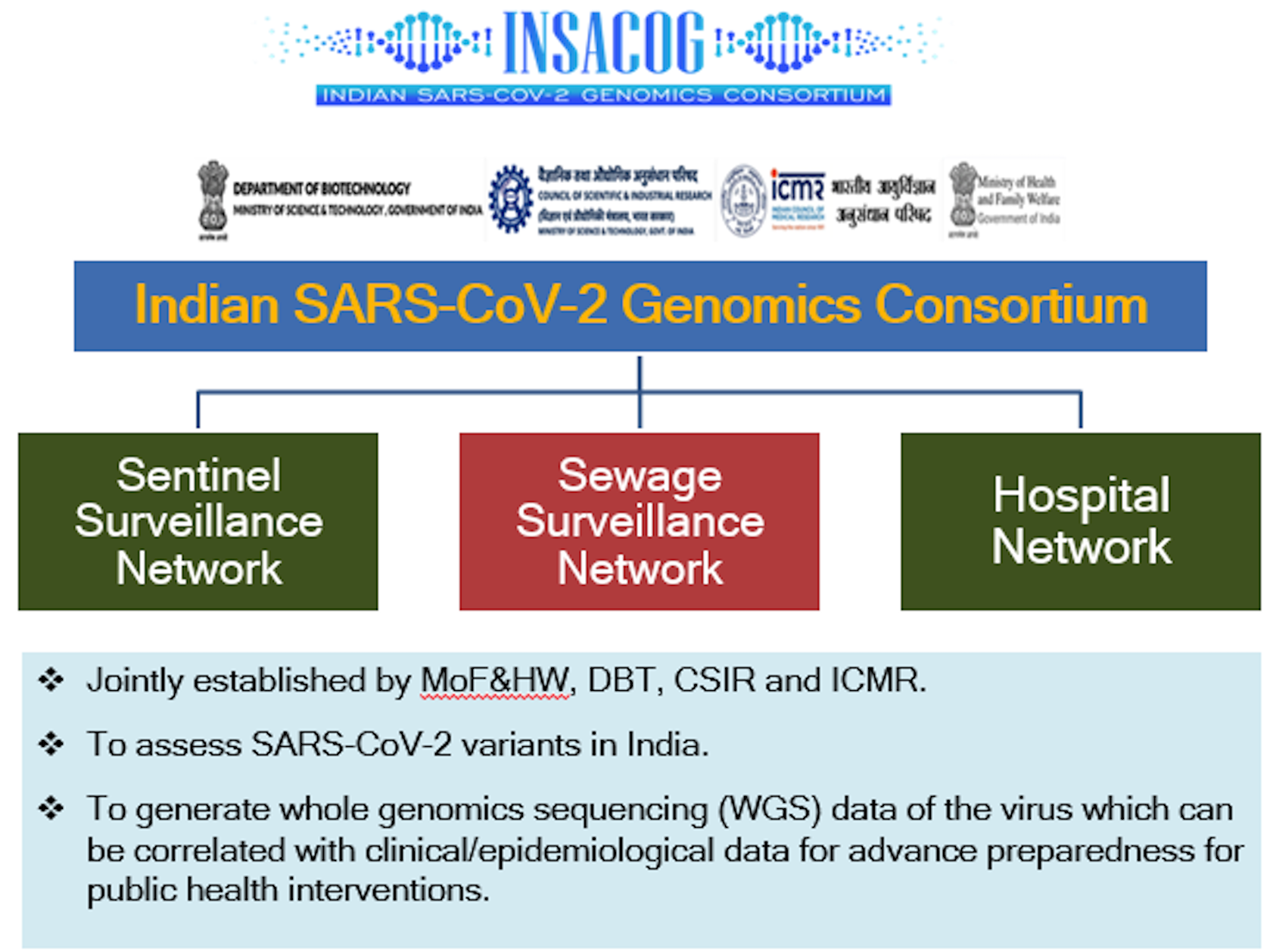
- 30 Dec 2023
Why is it in the News?
India reported a total of 109 JN.1 COVID variant cases in the country as of December 26, Health Ministry sources recently said.
What is Indian SARS-CoV-2 Genomics Consortium (INSACOG)?
- Established in December 2020, INSACOG is a collaborative initiative involving the Union Ministry of Health, the Department of Biotechnology (DBT) under the Ministry of Science and Technology, the Council for Scientific & Industrial Research (CSIR), and the Indian Council of Medical Research (ICMR).
- The consortium's primary mission is to expand whole-genome sequencing of SARS-CoV-2, the coronavirus responsible for Covid-19, across India.
- This initiative aims to comprehend the virus's spread and evolution.
- INSACOG initially engaged 10 national research laboratories of the central government and has grown into a network of 38 labs, including private labs, following a hub-and-spoke model.
- The consortium's Genome Sequencing Laboratories guide new laboratories, working in tandem to monitor genomic variations through sentinel sequencing facilitated by the National Centre for Disease Control (NCDC) under the Integrated Disease Surveillance Programme (IDSP) of the central government.
- Beyond sequencing efforts, INSACOG endeavors to establish a systematic correlation between genome sequencing and clinical outcomes.
- It is actively building a nationwide hospital network to investigate clinical correlations in mild versus severe cases of Covid-19.
- Additionally, the consortium is conducting a longitudinal study to comprehend long-term post-Covid complications and changes in immunity.
- Looking ahead, INSACOG is exploring sewage surveillance as an early detection tool and assessing the spread of variants in hotspot localities.
Horticulture boost: Litchi cultivation has expanded to 19 Indian states, according to officials (DownToEarth)
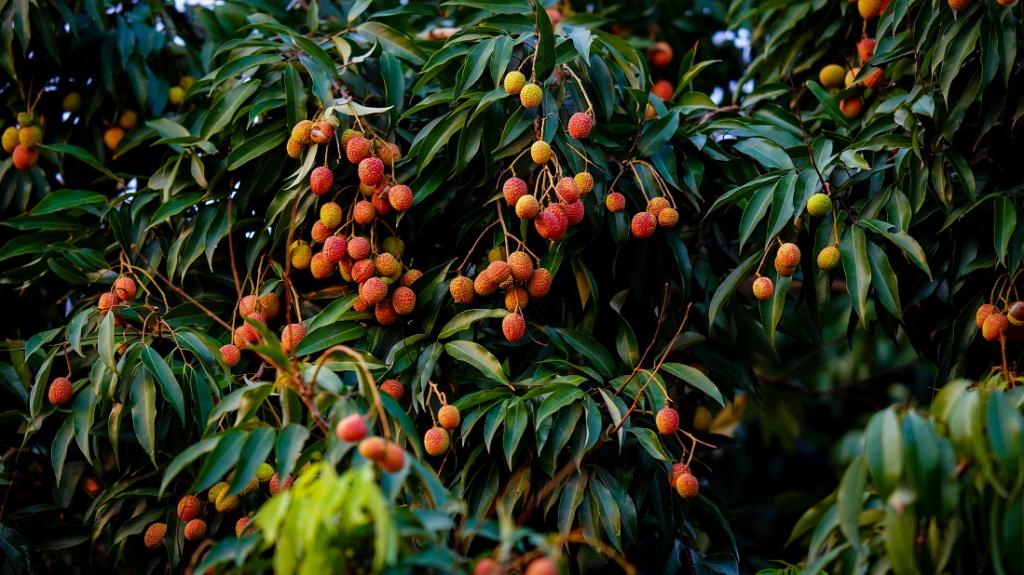
- 30 Dec 2023
Why is it in the News?
Litchi which is synonymous with India's hot summers, is now under cultivation in 19 Indian states, extending beyond its traditional confinement to Muzaffarpur in Bihar.
About Litchi Cultivation:
- Litchi, a delicious and succulent fruit of superior quality, belongs to the Sapindaceae family from a botanical perspective.
- Its translucent and flavorful aril, or edible flesh, is widely enjoyed as a table fruit in India.
- Agro-climatic Requirements: Litchi is a sub-tropical fruit that thrives optimally in moist sub-tropical climates.
- Ideally cultivated at low elevations, it can be grown up to an altitude of 800 meters.
- The crop flourishes in deep, well-drained loamy soil rich in organic matter, with an ideal pH range of 5.0 to 7.0.
- Temperature: The crop's temperature tolerance ranges from avoiding extremes, not exceeding 40.5 degrees Celsius in summer and staying above freezing point in winter.
- Rainfall: Prolonged rainfall, especially during flowering, can be detrimental as it interferes with pollination.
- Young trees necessitate protection from frost and hot winds until firmly established, although some temperature variation is necessary for proper fruiting.
- Frost during winter and intense summer heat are limiting factors for successful cultivation.
- Traditionally, commercial cultivation in India was confined to the northern foothills of the Himalayas from Tripura to Jammu & Kashmir, and the plains of Uttar Pradesh and Madhya Pradesh.
- However, due to increasing demand and the crop's viability, commercial cultivation has expanded to various states such as Bihar, Jharkhand, Madhya Pradesh, Chhattisgarh, etc.
- India ranks second in the world in production of Litchi production after China.
- Other significant producers include Thailand, Australia, South Africa, Madagascar, and the US.
- Statewise, Bihar tops in Litchi production followed by West Bengal (12 % of the total) and Jharkhand (10 %).
About National Research Centre on Litchi (NRCL):
- The National Research Centre on Litchi (NRCL) serves as the leading national institute dedicated to research and development in the field of litchi.
- It plays a pivotal role in providing national leadership, serving as a repository for comprehensive information on litchi production, processing, value addition, and extending consultancy services to end-users.
MEA’s Flagship ‘Know India Programme’ for youth diaspora completes 20 years (MEA GOI)
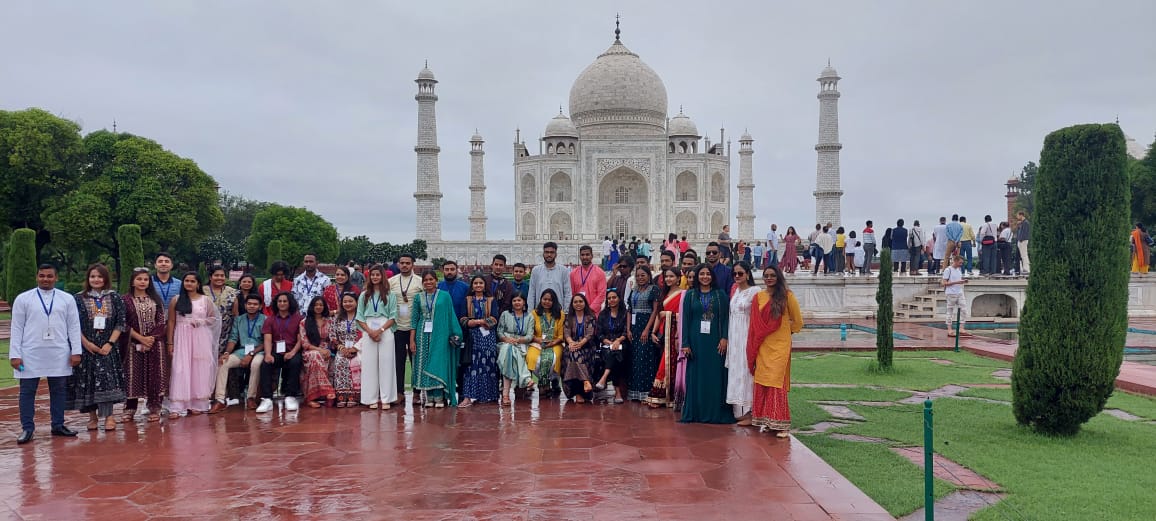
- 30 Dec 2023
Why is it in the News?
The flagship programme of the Ministry of External Affairs (MEA) for the youth diaspora, the ‘Know India Programme’, has completed 20 years.
About the Know India Programme (KIP):
- The Know India Programme is a flagship initiative of the Ministry of External Affairs designed to enhance awareness about India, its cultural heritage, and art, and to familiarize participants with various aspects of contemporary India and their ancestral homeland.
- This program is open to Persons of Indian Origin (21-35 years) (excluding non-resident Indians) from all over the world, with a preference for youth from Girmitiya countries, such as those from Mauritius, Fiji, Suriname, Guyana, Trinidad & Tobago, South Africa, and Jamaica.
- The program has been in existence since its inception in 2003.
Features of Know India Programme (KIP):
- It is a 21 days’ programme (excluding international travel) during which the participant will visit Delhi, Agra and a select state in India alongwith visits to places of historical, cultural, and religious significance.
- KIP participants will also have a 2-day orientation programme in New Delhi.
- Participants will meet opinion makers, leaders, and officials to get an overview of India’s economy, society and ongoing growth and development story.
- Participants are provided local hospitality e.g. boarding and Internal transportation in India, return air tickets from their country of residence to India provided participants bear 10% of the cost of total air fare.
- Gratis visa shall be granted to participants by the Indian Missions/Posts abroad.
- Some of the key elements of the Programme include:
- Visits to places of historical and cultural importance;
- Familiarisation with Yoga, Ayurveda, and classical forms of Music and Dance;
- Visit to institutions of democracy and governance like Parliament of India, Election Commission of India, Rashtrapati Bhawan;
- Interaction with leading educational institutions;
- Exposure to flagship economic and development schemes like Digital India, StartUp India, and Make in India; and
- visits to industrial sites, public and private firms to highlight India’s strength in Manufacturing & Service sector.
Eligibility Criteria:
- Minimum qualification required for participating in KIP is graduation from a recognized University /Institute or enrolled for graduation and the ability to speak in English.
- The applicant should not have visited India through any previous Programme of Government of India.
- Those who have not visited India before will be given preference.
- Applicant must provide documentary evidence to prove Indian origin or an undertaking about Indian origin which must be countersigned by the Indian Embassy/High Commission/Consul General.
States Returning to OPS Pose Significant Financial Burden: RBI (Indian Express)
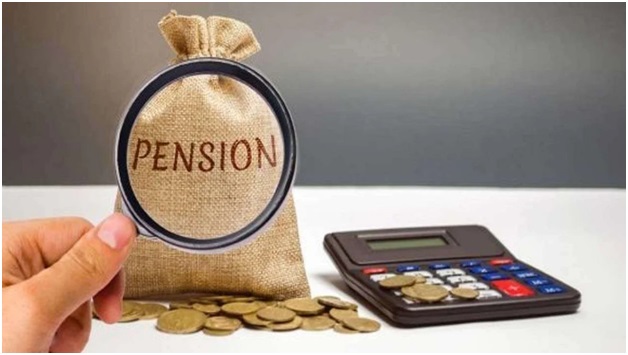
- 12 Dec 2023
Why is it in the News?
Recently, the RBI released a report saying, the return to the Old Pension Scheme (OPS) by a few states would put a huge burden on their finances, restricting them from undertaking capital expenditure to drive the growth.
What is the Old Pension Scheme (OPS)?
- The Old Pension Scheme (OPS), popularly OPS, is for state and central government employees who have completed 10 or more years of service.
- The appeal of the Old Pension Scheme lies in its commitment to provide a guaranteed or 'defined' benefit to retirees, classifying it as a 'Defined Benefit Scheme.'
- It provides government employees with pensions based on their final salary, amounting to 50% of the last drawn salary.
- For instance, if a government employee's final monthly salary upon retirement was Rs 10,000, they would receive a guaranteed pension of Rs 5,000.
- Similar to government employees' salaries, pension payouts increased with government-declared dearness allowance (DA) hikes.
- The Central government discontinued OPS in 2003.
What were the issues with the OPS?
- The primary concern was the unfunded nature of the pension liability, lacking a dedicated corpus that could grow over time to meet payment needs.
- The annual Government of India budget allocated funds for pensions without a clear strategy for sustaining future payments.
- The 'pay-as-you-go' approach raised inter-generational equity concerns, burdening the present generation with the escalating load of pension responsibilities.
- Recently, the RBI expressed alarm over some states, including Himachal Pradesh, Jharkhand, Punjab, Chhattisgarh, and Rajasthan, reverting to the OPS, citing it as a significant fiscal challenge.
- The RBI warned that by deferring current expenses to the future, states risk accumulating unfunded pension liabilities in the years to come.
What is the New Pension Scheme (NPS)?
- Introduced by the Central government in 2004 as an alternative to OPS, NPS is accessible to employees across public, private, and unorganized sectors, excluding those in the armed forces.
- This pension initiative encourages individuals to invest in a pension account regularly during their employment.
- Upon retirement, subscribers can withdraw a specific percentage of the accumulated corpus.
- The remaining amount is disbursed as a monthly pension post-retirement.
- Regulated by the Pension Fund Regulatory and Development Authority (PFRDA).
How does NPS differ from OPS?
- Old Pension Scheme (OPS) ensures a fixed and guaranteed pension amount.
- In contrast, the National Pension Scheme (NPS) is an investment-cum-pension scheme, exposing returns to market volatility.
- NPS contributions are defined, but benefits are contingent on market performance.
Why Rural India Needs Women Drone Pilots? (Indian Express)
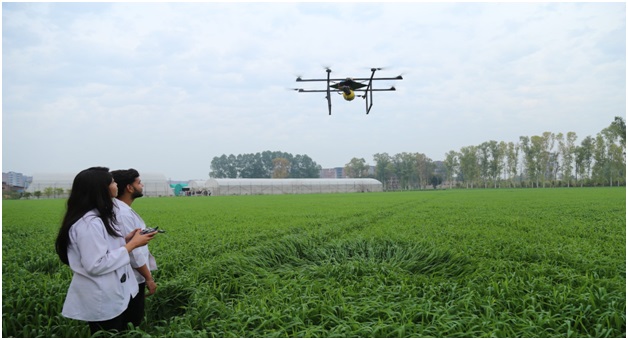
- 12 Dec 2023
Why is it in the News?
The NAMO Drone Didi Scheme provides new work opportunities to women and makes them the backbone of the rural economy.
What is the NAMO Drone Didi Scheme?
- The Prime Minister has recently approved the Central Sector Scheme (NAMO Drone Didi Scheme) for providing Drones to the Women Self Help Groups (SHGs), with an outlay of Rs. 1261 Crore.
- The scheme aims to provide drones to 15,000 selected Women SHGs during the period 2023-24 to 2025-2026 for providing rental services to farmers for agriculture purposes.
- The scheme seeks to empower women Self Help Groups (SHGs) and bring new technologies through drone services in the agriculture sector.
The highlights of this scheme are as follows:
- Departments involved: The scheme converges the resources and efforts of the Department of Agriculture & Farmers Welfare (DA&FW); Department of Rural Development (DoRD); Department of Fertilizers (DoF); Women SHGs and Lead Fertilizer Companies (LFCs).
- Identification of SHGs: The women SHGs would be identified from the total 89 lakh SHGs formed under the Deendayal Antyodaya Yojana.
- Financial Assistance:
- Central Financial Assistance covering 80% of drone costs up to a maximum of Rs. 8 Lakh will be provided.
- The remaining amount can be raised through the National Agriculture Infra Financing Facility (AIF) with a provision of interest subvention @ 3% on the AIF loan.
- Training:
- One of the members of SHGs will be trained in drone piloting skills and agriculture purposes of nutrient and pesticide application.
- Another member will be trained as a drone technician.
- This will allow them to not just operate the drone but also repair and maintain it.
- Nano Fertilizers: The scheme also promotes the use of Nano Fertilizers like Nano Urea and Nano DAP through drone services.
- Opportunities for Start-ups: The scheme not only empowers women but also opens avenues for dynamic start-ups in the field of drone aeronautics, tapping into significant untapped potential in this emerging sector.
Significance of the NAMO Drone Didi Scheme:
- Empowering Rural Women: Fosters technological empowerment of rural women, positioning them as the backbone of the rural economy.
- Places drone technology in the hands of women pilots from Self-Help Groups (SHGs).
- Modernizing Agricultural Practices: Addresses the imperative to modernize agricultural practices.
- Aims to elevate agricultural productivity through cutting-edge technology, contributing to a new agricultural revolution.
- Job Opportunities in Drone Aeronautics: Creates opportunities in the emerging field of drone aeronautics with substantial untapped potential.
- Opens avenues for rural women as pilots, mechanics, and spare-part dealers.
- Efficient Fertigation System Development: Facilitates the development of an efficient fertigation system.
- Introduces innovative liquid fertilizers like Nano Urea and Nano DAP with foliar application.
- Time-Efficient Spraying System: Automation of the spraying system through agri-drones ensures a time-saving and efficient application system.
- Equitable Agrarian Family Culture: Contributes to making the agrarian family culture more equitable and robust.
Article 356 of the Indian Constitution (The Hindu)
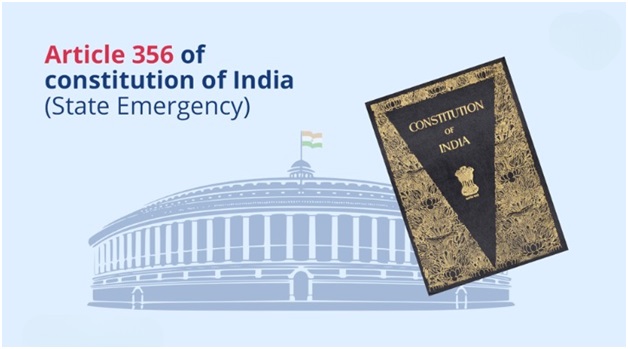
- 12 Dec 2023
Why is it in the News?
The Supreme Court recently held that the declaration of State emergency under Article 356 and the subsequent actions of the President should have a “reasonable nexus”.
What is Article 356 of the Indian Constitution?
Article 356 of the Constitution of India is based on Section 93 of the Government of India Act, 1935. According to Article 356, the President's Rule can be imposed on any state of India on the grounds of the failure of the constitutional machinery.
There are two types:
- If the President receives a report from the state's Governor or otherwise is convinced or satisfied that the state's situation is such that the state government cannot carry on the governance according to the provisions of the Constitution.
- Article 365: As per this Article, President's Rule can be imposed if any state fails to comply with all directions given by the Union on matters it is empowered to.
In simple words, President's Rule is when the state government is suspended and the central government directly administers the state through the office of the governor (centrally appointed. It is also called State Emergency or Constitutional Emergency.
President's Rule:
- Parliamentary approval is necessary for the imposition of the President's Rule on any state.
- The proclamation of President's Rule should be approved in both Houses of Parliament within two months of its issue.
- The approval is through a simple majority.
- The President's Rule is initially for a period of six months.
- Later, it can be extended for a period of three years with parliamentary approval, every six months.
- The 44th Amendment to the Constitution (1978) brought in some constraints on the imposition of the President's Rule beyond a period of one year. It says that the President's Rule cannot be extended beyond one year unless:
- There is a national emergency in India.
- The Election Commission of India certifies that it is necessary to continue the President's Rule in the state because of difficulties in conducting assembly elections in the state.
What happens after the President's Rule is imposed?
- The governor carries on with the administration of the state on behalf of the President. He or she takes the help of the state's Chief Secretary and other advisors/administrators whom he or she can appoint.
- The President has the power to declare that the state legislature's powers will be exercised by the Parliament.
- The state legislative assembly would be either suspended or dissolved by the President.
- When the Parliament is not in session, the President can promulgate ordinances with respect to the state's administration.
When is the President's Rule imposed?
- President's Rule is typically imposed when any of the following circumstances occur:
- The state legislature is unable to elect a leader as the Chief Minister within the time prescribed by the state's governor.
- Breakdown of a coalition in the state government, resulting in the Chief Minister having minority support in the legislature, and the CM is unable to prove a majority within the time prescribed by the governor.
- A vote of no confidence in the legislative assembly leads to a loss of majority.
- Postponement of elections due to unavoidable reasons such as a natural disaster, epidemic, or war.
Revocation of President's Rule:
- President's Rule can be revoked anytime after such a proclamation has been made by a subsequent proclamation by the President.
- A proclamation of revocation does not require approval by the Parliament.
- This occurs when the leader of a political party produces letters indicating majority support for him in the assembly and stakes his claim to form the state government.
How do web browsers work? (The Hindu)
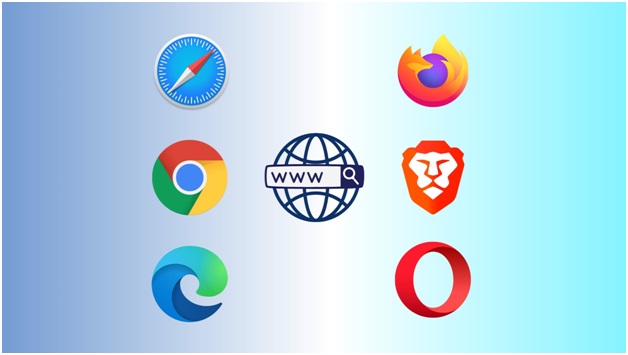
- 12 Dec 2023
Why is it in the News?
Web browsers are our digital passports to the vast universe of the internet. Their simplicity is deceptive: beneath their user-friendly interfaces lies a world of intricate processes that transform clicks into the web pages we interact with every day.
What are web browsers?
- Fundamentally, the browser is an application that people use to send and receive messages via the internet.
- In other words, the browser is a program that runs on our device, with its purpose being to fetch information in different formats from the internet and show it on the device.
- It also does the reverse, receiving your input (say, a click), translating it to code, and transmitting it to some other machine across the internet.
- In the year 1990, the English computer scientist Tim Berners-Lee introduced the concept of the World Wide Web also named ‘WorldWideWeb’.
What Constitutes a Web Browser?
Web browsers today comprise numerous essential components, each representing a sophisticated technology. Additionally, they depend on various supporting technologies and adhere to established standards governing the functioning of the Internet.
- Request and Response: When we enter a website's URL, the browser sends a request to a server, asking for the specific web page.
- The server processes the request and sends back a response containing the information needed to construct the page.
- This response, akin to a digital blueprint, travels back to our browser.
- Deconstructing the Response: The server's response comprises various files encoded in HTML, CSS, and JavaScript.
- HTML outlines the webpage structure, CSS adds style and aesthetics, while JavaScript brings interactivity, making the page dynamic and engaging.
- Rendering: The browser deciphers HTML, applies CSS for styling, and executes JavaScript for interactivity, rapidly assembling the final webpage.
- Rendering engines are crucial technology enabling quick and cohesive visual presentation.
- Managing Data: Browsers use cookies for retaining site preferences and cache for storing frequently accessed files.
- Cookies act like post-it notes, preserving login status and preferences, while the cache accelerates page loading by retrieving stored files instead of downloading them again.
- Security: Browsers prioritize security by employing encryption protocols like HTTPS for data exchange.
- They create secure 'tunnels' to shield information during transmission. Warning systems alert users about potential threats, enhancing overall online safety.
As technology advances, web browsers are on a trajectory of continuous evolution. They are integrating state-of-the-art technologies such as WebAssembly, facilitating near-native performance within the browser. The future holds promises of support for virtual reality (VR) and augmented reality (AR) experiences, offering immersive online interactions. Privacy features are also being fortified, empowering users with enhanced control over their digital presence.
Oil Producers Water Down Provision on Fossil Fuel Phase-out (Indian Express)
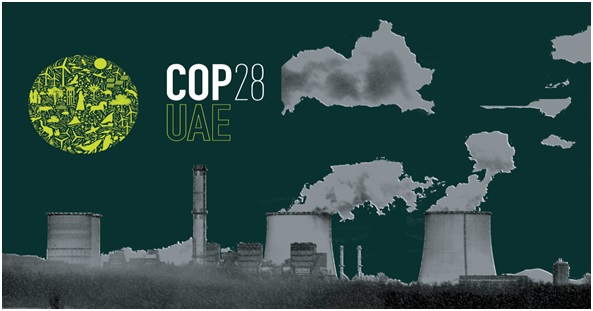
- 12 Dec 2023
Why is it in the News?
After four days of deadlock, a new draft agreement text emerged at the COP28 climate meeting that severely watered down earlier provisions on fossil fuel elimination but singled out coal for a rapid phase-down, which could be problematic for India.
Context:
- The 28th Conference of the Parties (COP 28) to the United Nations Framework Convention on Climate Change is underway in the United Arab Emirates from November 30 to December 12, 2023.
- During the climate meeting on December 10, negotiators took an initial step toward enhancing action on adapting to climate change.
- A draft text outlining potential "global goals" on adaptation was introduced for the first time, serving as a starting point for further negotiations.
- Negotiators are actively discussing various topics, including the contentious issue of fossil fuel phase-out, in informal sessions to find common ground.
- The draft document is titled 'Global Goal on Adaptation' (GGA) and aims to establish a shared global objective for adaptation, similar to the global goal of limiting temperature rise below the 1.5 degrees Celsius threshold for mitigation.
- This initiative addresses a longstanding demand from developing countries, emphasizing the need for increased focus and resource mobilisation for adaptation efforts.
- Notably, the draft removes the term 'phasing out' of fossil fuels but includes stronger language against coal, urging a "rapid phase-down of unabated coal," a point that may face objections from major consumers like India, Indonesia, and China, all developing countries heavily reliant on coal power.
Responses to the Draft Text 'Global Goal on Adaptation':
- The European Union (EU) and certain small island states promptly dismissed the draft agreement text.
- The EU climate commissioner criticized the overall insufficiency of the text, deeming it inadequate in addressing the climate change challenge.
- Primary dissatisfaction arose from the weakening of a provision related to the use of fossil fuels.
- The draft initially urged countries to "reduce both consumption and production of fossil fuels, in a just, orderly, and equitable manner."
- Notably, fossil fuels, responsible for nearly 80 percent of greenhouse gas emissions, have never been explicitly mentioned in prior COP decisions.
- While previous decisions emphasized the need to cut emissions, they avoided specifying actions for emission reduction.
- COP28 marked the first formal discussion of a fossil fuel phase-out but attempts to incorporate a robust provision faced resistance from oil-producing nations like Saudi Arabia and Russia.
- India, while not offering an immediate reaction to the draft agreement, has consistently asserted that singling out coal for accelerated reduction is discriminatory.
Youth for Unnati and Vikas with AI (YUVAi) (NewsOnAir)
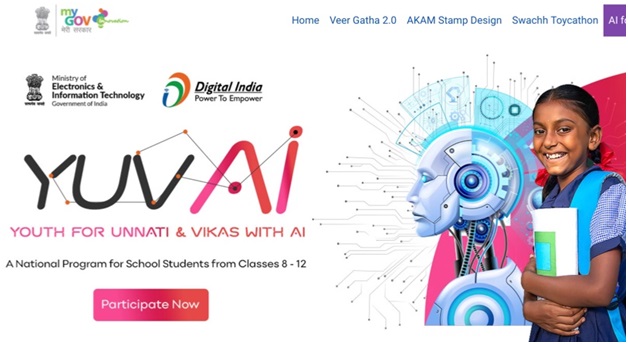
- 11 Dec 2023
Why is it in the News?
YUVAi Student Finalists to showcase their AI-enabled social impact projects at the GPAI summit.
About Youth for Unnati and Vikas with AI (YUVAi) Initiative:
- YUVAi is aimed at fostering a deeper understanding of AI, to equip school students from classes 8th to 12th across the nation with AI skills, and to empower them to become human-centric designers and users of AI.
- In addition, the program offers an applied learning experience for students to understand and identify how AI technology can tackle critical problems and lead to the inclusive development of the nation.
- It is a collaborative initiative of the National e-Governance Division (NeGD), Ministry of Electronics & Information Technology (MeitY), Government of India and Intel India.
- The objectives of YUVAi are to :
- Foster a deeper understanding of AI-tech and social skills
- Enable youth to develop AI-enabled solutions as a sign of achievement
- Empower youth to become human-centric designers and users of AI
- The program will be conducted in three phases.
- In the initial phase, teachers will be selected to identify students from their respective schools and share their details with the organizing team.
- Next, online orientation sessions will be conducted for registered students around core AI concepts by experts to facilitate understanding of the ideation process.
- Finally, students will be encouraged to submit ideas (individually or in teams of 2) through a 120-second video explaining a proposed AI-enabled solution for any one of the eight core themes- agriculture, healthcare, education, environment and clean energy, transportation, rural development, smart cities and law and justice.
- Shortlisted students will attend online deep dive AI training in the second phase.
- A 3-day face-to-face boot camp will be organized to provide adequate mentorship and guidance by YUVAi coaches.
- After the mentorship camps, students will use this newly gained knowledge to develop AI-enabled innovations/projects on any of the eight core themes and submit final entries.
- Finally, the most innovative AI-based solutions will be announced and invited to a national showcase and felicitation ceremony.
- Rewards: Upon a successful idea submission, students will be awarded a Certificate of Appreciation.
Protein from Budgett’s frog can block enzymes of disease-causing pathogens (The Hindu)
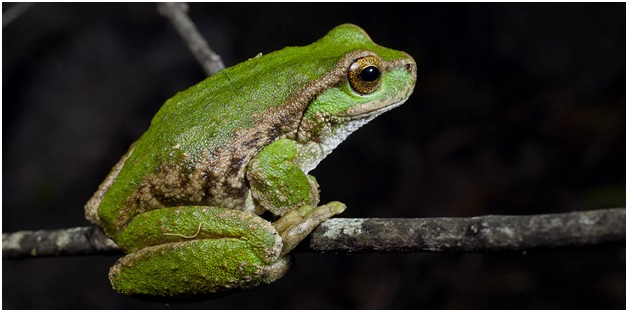
- 11 Dec 2023
Why is it in the News?
Researchers from the Indian Institute of Science’s (IISc.) molecular biophysics unit in a study have identified that peptides (short protein) produced from Budgett’s frog can combat enzymes of disease-causing pathogens.
Key Research Findings:
- The research focused on peptides, or short proteins, derived from amphibian skin, a subject of prolonged study due to their capacity to counter adverse environmental conditions, including harmful pathogens.
- A peptide secreted by frogs demonstrated inhibitory effects on two crucial enzymes, namely subtilisin Carlsberg and proteinase K, which are produced by pathogens.
- These enzymes play a crucial role in fostering infections by breaking down specific protective proteins within the infected individual.
- The studied peptide exhibited its inhibitory action through a slow-tight binding pathway, proving to be as effective as SSI, a well-established subtilisin inhibitor.
- The researchers illustrated the formation of a Michaelis complex—an intact, noncovalent complex with the inhibitor—during the process.
About Budgett’s frog:
- Budgett’s frogs exhibit high intelligence and a notably assertive nature.
- When alarmed, they employ a defensive strategy by inflating themselves, standing on short legs, and, if necessary, lunging at potential threats with an open, imposing mouth accompanied by a distinctive shriek.
- During the dry season, these frogs take refuge in burrows they construct at the bottoms of water pools.
- Within these burrows, they shed multiple layers of skin to create a waterproof cocoon, ensuring their moisture retention.
- Equipped with exceptional night vision and a keen sensitivity to movement, Budgett’s frogs showcase effective hunting skills.
- Habitat/Range: Found in proximity to permanent or seasonal bodies of water, Budgett’s frogs inhabit regions across Paraguay, Argentina, and Bolivia.
- Conservation Status:
- IUCN Red List: Classified as Least Concern.
Royal Bengal Tiger spotted in Pangalokha Wildlife Sanctuary (PTI)
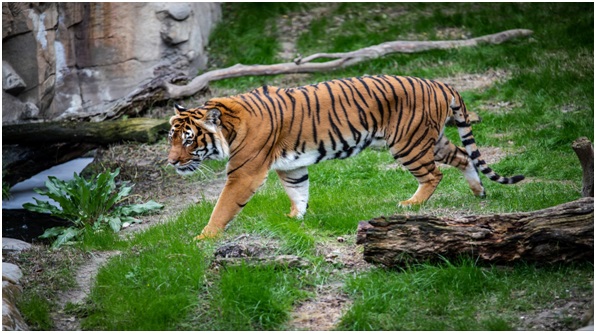
- 11 Dec 2023
Why is it in the News?
Recently a Royal Bengal Tiger was spotted in Pangalokha Wildlife Sanctuary in Sikkim at an altitude of 3,640 metres.
Context
- Royal Bengal Tiger has been sighted in the Pangalokha Wildlife Sanctuary in Sikkim roaming at an altitude of 3,640 meters.
- The Royal Bengal Tiger was captured by trap cameras of a team of the Bombay Natural History Society (BNHS) which is conducting a study in the sanctuary in collaboration with the Sikkim Forest Department.
- It was under a larger project called "Conservation and Use of Five Wetlands in three Himalayan States to Secure Habitats of Birds Migrating within the Central Asian Flyway (CAF)."
- This project was sanctioned under the National Mission on Himalayan Studies (NMHS), and aims to protect and conserve wetland sites in Ladakh, Himachal Pradesh, and Sikkim.
About Pangalokha Wildlife Sanctuary:
- The Pangalokha Wildlife Sanctuary is located at the tri-junction of Sikkim, Bengal and Bhutan and is spread over 128 square kilometres.
- The sanctuary is strategically located in the East Sikkim district, connecting the forests of Bhutan and the Neora Valley National Park in West Bengal.
- It is the largest wildlife sanctuary in Sikkim.
- Vegetation: The Sanctuary has typical alpine-temperate-subtropical vegetation with high-altitude lakes around Jelep La.
- Flora: Rhododendron, Silver Fir, Juniper forest and associated ground flora, moss-filled oak forests with dense bamboo thickets etc.
- Fauna: It is home to various species, including red pandas, snow leopards, Himalayan musk deer, Himalayan goral, and Himalayan black bears.
EU’s Landmark Deal on Artificial Intelligence Regulation (Indian Express)
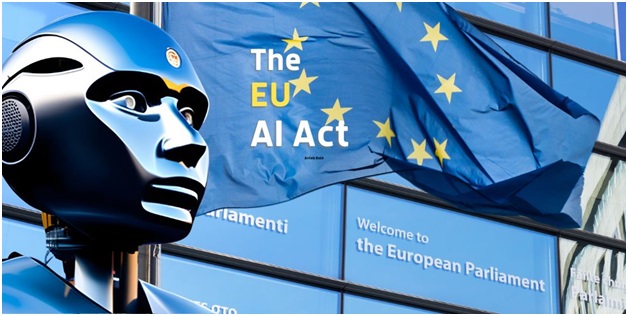
- 11 Dec 2023
Why is it in the News?
Recently European Union policymakers agreed on a provisional deal on landmark rules governing the use of artificial intelligence (AI).
On December 8, EU member states and lawmakers reached a consensus on the formulation of "historic" rules governing artificial intelligence models like ChatGPT, concluding prolonged negotiations.
However, these rules are slated to come into effect no earlier than 2025, allowing room for technological advancements in the interim.
Key Highlights:
- The inception of the Artificial Intelligence Act dates back to 2021, aiming to instil transparency, trust, and accountability in AI practices.
- Its overarching goal is to establish a framework to address risks to safety, health, fundamental rights, and democratic values within the EU.
- Featuring a two-tier approach, the Act imposes transparency requirements on all general-purpose AI models, with more stringent measures for the more powerful ones.
- The Act proposes the creation of an EU-wide database cataloguing high-risk AI systems, with provisions for the inclusion of future technologies meeting high-risk criteria.
- The legislation seeks a delicate balance between fostering AI adoption and preventing or mitigating harms associated with specific applications of the technology.
Global Perspectives on Artificial Intelligence Governance:
- The dynamic evolution of Artificial Intelligence (AI) development has prompted diverse global perspectives on the regulation of these technologies.
- In May 2023, members of the European Parliament reached a preliminary agreement on a revised draft of the European Union's ambitious Artificial Intelligence Act.
- This Act envisions the creation of an EU-wide database for high-risk AI systems and outlines criteria for the inclusion of future technologies that meet these high-risk parameters.
- In contrast, the United States currently lacks comprehensive AI regulations and has adopted a relatively hands-off approach.
- On the opposite end of the spectrum, China has, in the past year, introduced some of the world's initial nationally binding regulations specifically targeting certain types of algorithms and AI.
- It has implemented a law to govern recommendation algorithms, with a particular focus on how these algorithms disseminate information.
India’s Position on Artificial Intelligence:
- Initially, the Union Minister for Electronics and Information Technology stated that the government was not contemplating any legislation to oversee the development of AI in India.
- However, in the lead-up to the G20 summit in September 2023, the Indian government hinted at the potential regulation of AI.
- Officials indicated that the forthcoming Digital Personal Data Protection Bill 2022 would extend to AI developers engaged in creating and facilitating AI technologies.
- Given the substantial data collection and utilization by AI developers to train their algorithms and enhance AI solutions, they may be classified as data fiduciaries and held accountable for the responsible use of personal data.
- Prime Minister Modi recently expressed India's aspiration to "take a giant leap in AI to empower its citizens and actively contribute to its evolution."
- India is gearing up to host the Global Partnership on Artificial Intelligence (GPAI) Summit 2023 in New Delhi from December 12-14.
- As a co-founder of GPAI, India, along with 28 member countries and the EU, is committed to guiding the responsible development and utilization of AI.
India's Ambitious Initiative to Expand Renewable Energy Capacity (Indian Express)
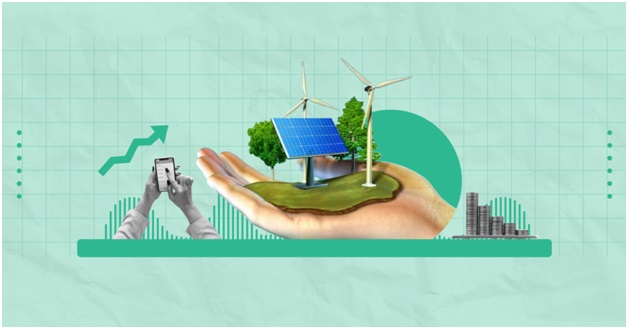
- 11 Dec 2023
Why is it in the News?
The Ministry of New and Renewable Energy (MNRE) has proposed an exemption for green hydrogen developers from adhering to its list of authorised manufacturers to enable them to import solar PV modules and wind turbine models from China.
What Does The Ministry of New and Renewable Energy (MNRE) Propose?
- The Ministry of New and Renewable Energy (MNRE) is exploring the option of granting an exemption to green hydrogen developers from its list of authorized manufacturers.
- This proposed exemption would enable these developers to import solar PV modules and wind turbine models from China, aiming to enhance the competitiveness of green hydrogen exports.
- It's noteworthy that Chinese manufacturers are presently absent from MNRE's Approved List of Models and Manufacturers (ALMM) and Revised List of Models and Manufacturers (RLLM).
The MNRE’s Proposal Background:
- After the 2020 Galwan Valley skirmishes, the Indian government issued directives to restrict the involvement of Chinese vendors in public procurement.
- Recently, the Indian procurement portal GeM announced the removal of hundreds of Chinese vendors over the past three years.
- At a time when energy companies are intensifying efforts to mass-produce green hydrogen, essential for which are renewable energy equipment and electrolysers, the government has sidelined Chinese manufacturers.
- This aligns with the MNRE's policy to enhance domestic manufacturing of renewable energy equipment.
- While central PSUs may face restrictions on importing electrolysis machinery from China, others continue to do so.
- In FY23, India witnessed a 40% increase, in importing machines and apparatus for electroplating, electrolysis, and electrophoresis, worth $45.61 million, compared to the preceding fiscal year.
What is the Significance of the MNRE’s Proposal?
- ??The proposal to import solar PV modules from China carries significance in bolstering the supply chain and enhancing the global competitiveness of Indian green hydrogen exports.
- Central PSUs such as Indian Oil Corporation Ltd and NTPC Ltd, both actively involved in green hydrogen projects, would benefit by sourcing equipment from Chinese manufacturers.
- This move is poised to strengthen India's position in the global green hydrogen market, aligning with the objectives outlined in the National Green Hydrogen Mission and facilitating the achievement of set targets.
Painkiller Meftal could cause DRESS syndrome (Financial Express)
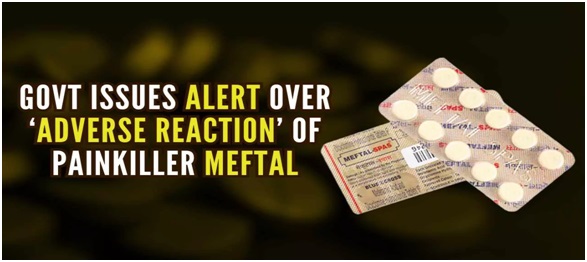
- 07 Dec 2023
Why is it in the News?
Indian Pharmacopoeia Commission (IPC) has recently issued a drug safety alert for doctors and patients about the use of the commonly used painkiller mefenamic acid, popularly sold under the brand name Meftal.
Context:
- The Pharma standard body, Indian Pharmacopoeia Commission (IPC) in its preliminary analysis of Adverse Drug Reactions (ADRs) from the PvPI database revealed that Meftal can lead to Drug Reactions with Eosinophilia and Systemic Symptoms (DRESS) Syndrome.
- According to doctors, this syndrome causes a diverse array of clinical symptoms, anywhere from 2 to 8 weeks after initiating the offending drug.
What is DRESS syndrome?
- DRESS syndrome (Drug Rash with Eosinophilia and Systemic Symptoms) is an adverse reaction term that is currently used to describe a hypersensitivity reaction.
- Experts classify DRESS syndrome as a type 4 hypersensitivity reaction.
- It is a serious drug reaction affecting the skin and other organs, with a mortality rate of up to 10%.
- It manifests when the immune system excessively responds to specific medications, leading to a type 4 hypersensitivity reaction.
- This reaction can manifest with various symptoms across the body, including fever, abnormalities in blood, and inflammation of organs.
What are the symptoms of DRESS syndrome?
- Patients diagnosed with DRESS syndrome typically present with a rash, fever, and eosinophilia but can have a variety of symptoms including liver, lung, or kidney involvement.
- “DRESS syndrome should be suspected if a diffuse rash erupts and is accompanied by fever, facial edema, and enlarged lymph two to six weeks after starting a new high-risk medication.
How to treat DRESS Syndrome?
- The most important step to treat DRESS Syndrome is to stop the medication involved in the reaction, and sometimes, no further treatment is needed.
- Topical steroids can be given to treat the rash and in certain cases, further treatment is needed to protect the organs from damage, such as with steroids, which can be given either intravenously or orally.
- “Treatment with steroids can be needed for weeks or even months, and lab work is monitored carefully during this time.
- The average time to recovery is six to nine weeks.
Odisha Invokes ESMA to Ban Strikes by Health Department Staffs (The Hindu)
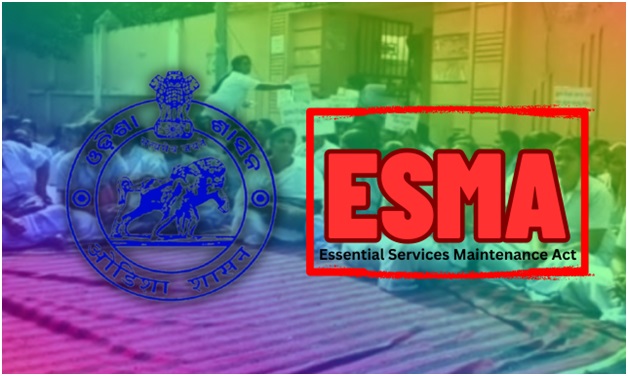
- 07 Dec 2023
Why is it in the News?
The Odisha Government invoked the Orissa Essential Services (Maintenance) Act (ESMA) prohibiting strikes by paramedical staff, including nurses, pharmacists, technicians, Class III and IV employees, to ensure that medical services are not disrupted.
About Essential Services Maintenance Act (ESMA):
The Indian Parliament enacted ESMA in 1968 to ensure the continuous provision of critical services crucial to people's daily lives. This legislation prohibits employees in essential services from striking, regardless of bandhs or curfews.
- Designated Essential Services: Public conservation, sanitation, water supply, hospitals, national defense, petroleum, coal, electricity, steel, fertilizer production, and banking-related services fall under the ambit of essential services.
- Communication, transportation, and government initiatives for food grain acquisition and distribution are also covered.
- State-Specific Application: State governments, individually or collaboratively, can enforce ESMA within their territories, each having its own version with slightly varied provisions.
- This allows states to address disruptions that impact specific regions.
- Central Government Activation: In the case of a nationwide disruption, especially in sectors like railways, the central government may invoke ESMA.
- Consequences for Striking Employees: Employees engaging in illegal strikes under ESMA can face disciplinary action, including dismissal. Legal consequences may involve arrests without a warrant, with imprisonment for up to one year, fines, or both for those participating or instigating the strike.
UN Secretary-General Invokes Article 99 on Humanitarian Crisis in Gaza (The Hindu)
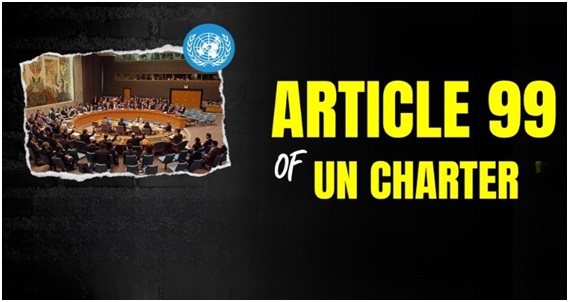
- 07 Dec 2023
Why is it in the News?
Amid Israel’s ongoing military attacks on the Gaza Strip, particularly in its southern region, United Nations Secretary-General Antonio Guterres has invoked Article 99 of the UN Charter in a bid to establish a ceasefire.
Context:
- The United Nations Secretary-General Antonio Guterres has decided to invoke Article 99 of the UN Charter as the death toll in Israeli bombardments on Gaza crosses 16,000.
- He also urged the UN Security Council to act on the humanitarian crisis in Gaza.
- The development comes as Israel increased the intensity of its operations, especially in the areas of southern Gaza with Israel's defence leadership claiming that “half of Hamas’ battalion commanders" are killed.
What is Article 99 of the UN Charter?
- The Secretary-General may bring to the attention of the Security Council any matter which in his opinion may threaten the maintenance of international peace and security.”
- It is seen as a discretionary power.
- The responsibility it confers upon the Secretary-General will require the exercise of the highest qualities of political judgment, tact and integrity” according to a 1945 report of the Preparatory Commission of the United Nations.
- According to the UN, the President of the Security Council is under the obligation to call a meeting of the Council if the Secretary-General brings to the attention of the Council any matter under Article 99.
When has Article 99 Been Activated in the Past?
- 1960: Following the Congo Crisis, Secretary-General Dag Hammarskjöld invoked Article 99 to address the aftermath of Belgium's withdrawal and the ensuing internal conflict.
- 1971: Amid the Bangladesh Liberation War, Secretary-General U Thant activated Article 99 to draw attention to the humanitarian crisis, urging international intervention.
- 1979: In response to the Iranian Revolution and hostage crisis, Secretary-General Kurt Waldheim triggered Article 99 to underscore the seriousness of the situation and the necessity for a peaceful resolution.
- 1989: Confronted with the ongoing Lebanese Civil War and hostage abductions, Secretary-General Javier Pérez de Cuéllar invoked Article 99 to emphasize the requirement for international support and engagement.
‘Garba Of Gujarat’ Declared as Intangible Cultural Heritage by UNESCO (Indian Express)
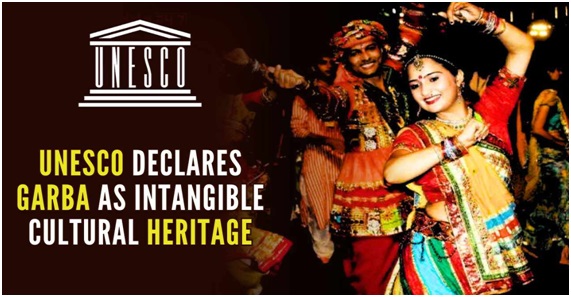
- 07 Dec 2023
Why is it in the News?
Garba, the folk art of Gujarat, receives the intangible cultural heritage of humanity (ICH) tag from Unesco.
Context:
- 'Garba of Gujarat' has been inscribed in the Representative List of Intangible Cultural Heritage (ICH) of Humanity by UNESCO.
- The decision was taken at the 18th session of the UNESCO’s Intergovernmental Committee for Safeguarding of Intangible Cultural Heritage held in the Republic of Botswana.
- Garba of Gujarat is the 15th ICH element from India to join this list.
- This inscription underscores Garba’s pivotal role as a unifying force that fosters social and gender inclusivity.
About Garba Dance:
- Garba is a ritualistic and devotional dance deeply rooted in the traditions of Gujarat, India.
- This vibrant dance is a central part of the nine-day Navratri festival, dedicated to the worship of feminine energy or Shakti.
- The cultural richness of Garba vividly expresses the divine feminine through its performances and visuals.
- Taking place in various settings, from homes and temple courtyards to public spaces, streets, and open grounds, Garba transforms into a widespread, inclusive community celebration.
- Beyond its religious significance, Garba serves as a social equalizer, breaking down barriers related to socio-economic status, gender, and sect divisions.
- This inclusive dance form fosters community unity, bringing together diverse and marginalized groups and reinforcing social bonds.
- Notably, Garba holds the distinction of being the 15th cultural element from India to be recognized by UNESCO.
What is Intangible Cultural Heritage?
- Cultural heritage extends beyond physical structures and object collections.
- It encompasses traditions and living expressions transmitted from our forebears to descendants.
- This includes oral traditions, performing arts, social practices, rituals, festive events, and the knowledge associated with nature, the universe, as well as the skills involved in traditional craftsmanship.
Chandrayaan-3 Propulsion Module Retraces Steps to Earth Orbit (Indian Express)
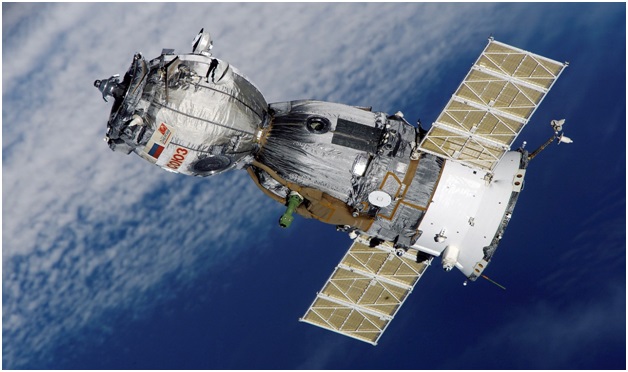
- 07 Dec 2023
Why is it in the News?
Scientists have brought the Propulsion Module (PM) of the Chandrayaan-3 mission , which initially brought the Vikram lander to within 100 km of the Moon's surface before detaching and executing a historic controlled descent on August 23, back into Earth orbit.
What is a Propulsion Module in Chandrayaan-3?
- The Propulsion Module is a rectangular component of the Chandrayaan-3 spacecraft, equipped with solar panels for power.
- Its primary purpose was to transport the Lander module to the lunar polar circular orbit and facilitate its separation.
- Following separation, the SHAPE payload within the Propulsion Module was activated.
- Initially intended for a three-month operation during the mission, the ISRO announced on December 4th that the Chandrayaan-3's Propulsion Module had been manoeuvred out of lunar orbit.
- Placed high above Earth for an additional mission, the module is currently sustained by residual fuel.
- This bonus mission will showcase technologies crucial for future lunar sample retrieval, according to ISRO.
- As of now, the ISRO has not disclosed its plans for the spacecraft once it depletes its fuel.
Importance of Propulsion Module's Return to Earth's Orbit:
- ISRO highlighted the key achievements resulting from the return manoeuvres conducted on the Propulsion Module (PM) in connection to upcoming missions:
- Planning and executing the trajectory and manoeuvres for the return journey from the Moon to Earth.
- Developing a software module for planning such manoeuvres, along with its initial validation.
- Planning and executing a gravity-assisted flyby around a planet or celestial body.
- Preventing uncontrolled crashing of the PM onto the Moon's surface at the end of its life, aligning with the requirement of avoiding debris creation.
What is Chandrayaan-3 Mission?
Mystery of megamouth shark solved after one washes up in Philippines (Business Insider)
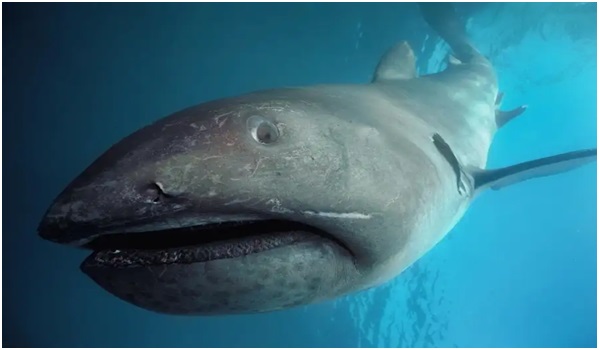
- 06 Dec 2023
Why is it in the News?
Recently a dead 18-foot megamouth shark that washed up on the beach in the Philippines was pregnant, confirming for the first time that these mysterious creatures give birth to live young.
About Megamouth Shark:
- Researchers have found Megamouth sharks to be particularly elusive.
- Since their discovery in 1976, there have been fewer than 300 sightings of these deep-sea sharks.
- Uncovering fewer than 150 specimens, scientists have identified them as the smallest of three species of filtering sharks.
- Their scientific name is Megachasma pelagios.
- Similar to their relatives, the basking sharks, Megamouth sharks feed on krill suspended in seawater, utilizing their oversized mouths to sieve their food.
- Although most sightings have occurred near the Philippines and Taiwan, these sharks have been observed around the world.
- These sharks are found in deep, warm oceanic water and inhabit the Atlantic, Indian, and Pacific oceans.
- Characterized by their substantial size, Megamouth Sharks can reach weights of up to 2700 pounds (1215 kg) and lengths ranging from 425 to 515 cm. Females are generally larger than males.
- Easily recognizable by their large, soft head and anteriorly positioned mouth, their colouration varies from grey to bluish-black above and pale grey below.
- They possess small, hooked teeth along both top and bottom jaws.
- As filter feeders, they swim with their mouths continuously wide open, filtering their preferred planktonic prey.
- The inside of their mouths is equipped with light-producing organs that may attract pelagic crustaceans and other potential prey.
- On the conservation front, the Megamouth Shark is listed as "Least Concern" on the IUCN Red List.
Closest-ever Sun photo captured by Solar Orbiter (India Today)
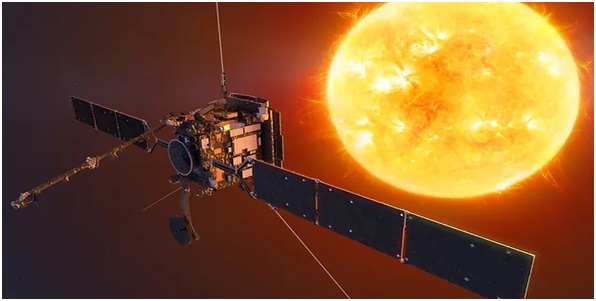
- 06 Dec 2023
Why is it in the News?
The European Space Agency's Solar Orbiter has captured the most detailed image of the Sun's full disc and outer atmosphere, the corona, to date.
What is the Solar Orbiter?
- Solar Orbiter is a Sun-observing satellite, equipped with 10 state-of-the-art science instruments, that aims to provide unprecedented insights into the workings of the Sun.
- It intends to conduct an in-depth study of both the Sun and the inner heliosphere, exploring the uncharted regions closest to our Solar System.
- A collaboration between the European Space Agency (ESA) and NASA, it represents the most intricate scientific laboratory ever dispatched to study the Sun.
- Distinguished by its capability to capture images of the Sun from a closer vantage point than any preceding spacecraft, it also marks the first exploration of the Sun's previously uncharted polar regions.
- Launched on February 10, 2020, the mission unveiled its initial images in June of the same year.
- Following gravitational assist manoeuvres at Earth and Venus, it commenced full science operations in December 2021.
- Solar Orbiter actively orbits the Sun in an elliptical trajectory, with its closest point, the perihelion, located approximately 25 million miles (40 million kilometres) from the Sun—closer than the orbit of Mercury.
- In terms of instrumentation, it actively carries six remote-sensing instruments for observing the Sun and the solar corona, along with four in-situ instruments for measuring the solar wind, energetic particles, and electromagnetic fields.
- The mission actively aims to continue its scientific operations until at least 2027.
Panchayat Development Index (PIB)
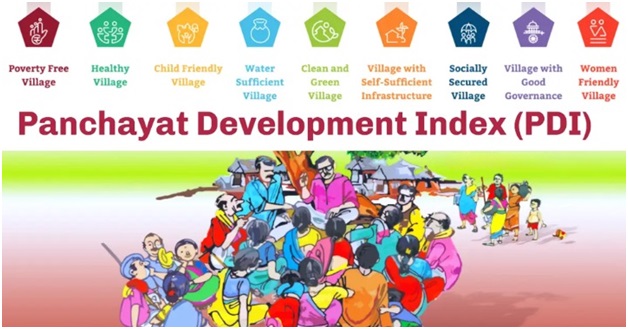
- 06 Dec 2023
Why is it in the News?
The Union Minister of State for Panchayati Raj recently informed Lok Sabha about the Panchayat Development Index.
About the Panchayat Development Index:
- The Panchayat Development Index serves as a comprehensive and versatile metric designed to actively evaluate the holistic advancement, efficacy, and ongoing progress of panchayats.
- This index actively considers a spectrum of socio-economic indicators and parameters, offering an actively nuanced understanding of the well-being and developmental status of local communities within the panchayat's jurisdiction.
- Objectives: The primary objective is to actively play a pivotal role in assessing performance and progress towards actively achieving Sustainable Development Goals at the grassroots level.
- An active component of this initiative is the Local Indicators Framework, which encompasses nine key themes for actively localising Sustainable Development Goals.
- These themes actively encompass creating poverty-free and thriving livelihoods, ensuring health and actively child-friendly environments, actively promoting water sufficiency, actively fostering clean and green spaces, actively developing self-sufficient infrastructure, actively establishing socially just and secure communities, actively promoting good governance, and actively creating women-friendly villages.
How Ranking Works?
- Ranks within the index are actively assigned based on scores, actively categorising panchayats into four grades.
- Those actively scoring below 40 percent are actively classified as Grade D,
- 40-60 percent as Grade C,
- 60-75 percent as Grade B
- 75-90 percent as Category A
- and those actively surpassing 90 percent are actively designated as A+.
- Significance of this Index: The significance of this index lies in its ability to actively offer valuable insights into areas requiring attention and improvement within rural areas under panchayat jurisdiction.
- It actively aids in identifying disparities, gauging the achievement of development goals, and actively crafting targeted policies and interventions to elevate the overall well-being and quality of life in rural communities.
Elephant Endotheliotropic Herpesvirus (EEHV) (DST Gov)
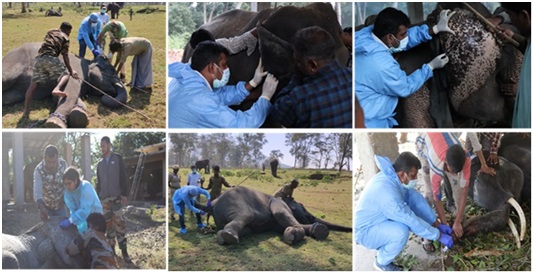
- 06 Dec 2023
Why is it in the News?
The study by ICAR-Indian Veterinary Research Institute (ICAR-IVRI), Izatnagar, Bareilly has found the exact status of EEHV and its subtypes circulating among the Asian elephant population in India.
What is Elephant Endotheliotropic Herpesvirus (EEHV)?
- Elephant endotheliotropic herpesvirus (EEHV) is responsible for one of the most devastating viral infectious diseases in elephants worldwide, especially young Asian elephants.
- EEHV is a double-stranded DNA virus that is classified in the family Herpesviridae.
- The mortality rate is very high (70-85%) and death occurs within a short period (2-4 days).
- In India, the incidence of EEHV-HD was first reported in 1997.
- 9 of 15 potential cases were confirmed from Southern India in wild free-ranging calves in Kerala, Karnataka, Tamil Nadu forest reserves, and Madras Zoo.
- Transmission of the disease: EEHV is mostly spread through mucosal secretions which include:
- Saliva, Breast milk, Nasal secretions, Trunk to trunk contacts etc
- The disease can only affect elephants and is not infectious to humans or other animals.
- Symptoms: Some elephants show symptoms such as reduced appetite, nasal discharge and swollen glands.
- Treatment: Treatment involves a combination of strategies such as antiviral therapy, aggressive fluid therapy to counter haemorrhaging, immuno-stimulant drugs like selenium and Vitamins C and E, as well as antipyretics and analgesics to manage fever.
- It's important to note that there is no definitive cure for herpesviruses in animals or humans since these viruses typically enter a latent state.
Scientists uncover seismic clues in Kopili Fault zone, advancing earthquake preparedness (PIB)
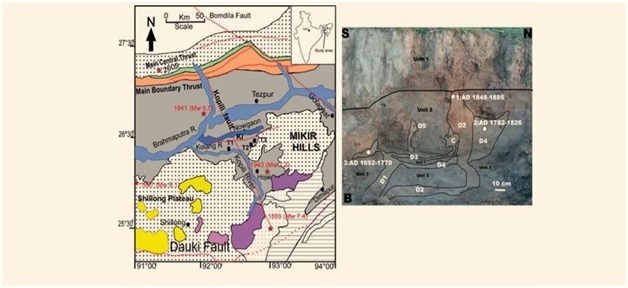
- 06 Dec 2023
Why is it in the News?
Recently, scientists at the Indian Institute of Geomagnetism (IIG) have detected seismogenic liquefaction characteristics within the dynamically active Kopili Fault (KF) zone.
About Kopili Fault Zone:
- The Kopili Fault extends from the western part of Manipur up to the tri-junction of Bhutan, Arunachal Pradesh and Assam.
- It covers a distance of about 400 km and is closer to the Himalayan Frontal Thrust.
- The Kopili fault bisects the Meghalaya Plateau and isolates the Mishmi block from the main part of the plateau.
- The Kopili fault is almost passing through the Kopili River.
- The river Kopili rises in the North Cachar Hills District in Borail Range at an altitude of 1525 meters.
- From a field study, it is observed that the Kopili Fault region is moving in the northeast direction at an average velocity of 28.397N mm/yr and 40.227E mm/yr.
- This region is characterized by heightened seismic activity, classified within the most critical Seismic Hazard Zone V.
- The geological dynamics are attributed to collisional tectonics, where the Indian Plate subducts beneath the Eurasian Plate.
- The fault itself is a transpressional fracture, producing dextral strike-slip earthquakes in the lower crust.
- The Kopili fault zone, a tectonic depression filled by the alluvium of the Kopili River and its tributaries, has experienced numerous seismic events, notable among them being the 1869 earthquake (magnitude 7.8) and the 1943 earthquake (magnitude 7.3).
Iyothee Thass Pandithar (The Hindu)
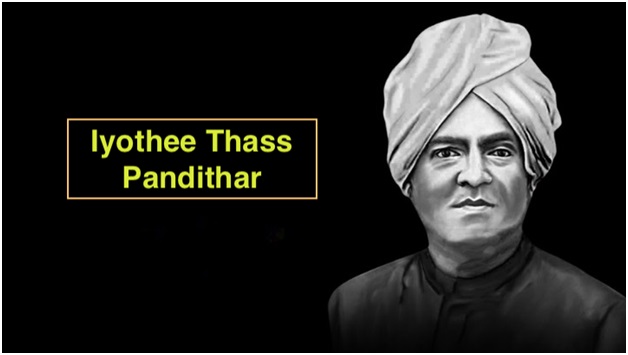
- 02 Dec 2023
Why is it in the News?
Tamil Nadu Chief Minister M.K. Stalin on Friday unveiled a statue of late anti-caste activist Iyothee Thass Pandithar installed at the Gandhi Mandapam campus at Guindy in Chennai.
About Iyothee Thass Pandithar:
- Iyothee Thass Pandithar was an important anti-caste activist and practiced Siddha medicine.
- He was born on 20 May 1845 in Madras presidency.
- In the 1870s, Thass brought together the Todas and other tribes of the Nilgiri Hills for the freedom movement.
- In 1876, he started the Advaidananda Sabha and, with Rev. John Rathina, launched a magazine called Dravida Pandian.
- In 1891, he founded the "Dravida Mahajana Sabha'' with Rettamalai Srinivasan.
- Also, he established the Sakya Buddhist Society in Madras, which had branches all over South India.
- This society, also known as the Indian Buddhist Association, was formed in 1898.
- To organize and oversee the society's activities, he began a weekly magazine, Tamizhan, in 1907.
INS Trinkat (Indian Express)
- 02 Dec 2023
Why is it in the News?
The Navy has appointed the first woman commanding officer in a naval ship in line with the Navy’s philosophy of “all roles-all ranks” to deploying women in the service, Navy Chief Admiral R Hari Kumar said on Friday.
About INS Trinkat:
- INS Trinkat is a patrol vessel crafted by Garden Reach Shipbuilders and Engineers in Kolkata, West Bengal, and serves the Indian Navy.
- The role of the INS Trinkat is for anti-poaching operations, counter-insurgency operations, and Search and Rescue Operations in Andaman and Nicobar Islands, Lakshadweep Islands, and India's Exclusive Economic Zone.
- It is capable of detecting and destroying fast-moving surface craft.
- It can also carry out policing anti-smuggling and fisheries protection operations.
- These patrol vessels are aptly named after Trinkat Island, one of the 24 islands constituting the Nicobar Islands chain situated in the northeast Indian Ocean, between the Bay of Bengal and the Andaman Sea.
About Group Captain Shaliza Dhami:
- Group Captain Shaliza Dhami, is an esteemed officer in the Indian Air Force (IAF).
- She holds the distinction of being the first woman officer in the IAF to secure a permanent commission and the pioneer woman to attain the role of a Flight Commander.
- Adding to her achievements, she became the first woman IAF officer selected for a front-line combat unit.
- Shaliza Dhami is an officer who is a qualified navigation instructor and has been involved in training observers inducted into the Navy.
- She is also learned to be the first woman officer who served as an observer in the Navy’s Tupolev Tu-142 maritime patrol aircraft.
- It's noteworthy that she is poised to make history once again by assuming command of a ship, marking a significant milestone in her career.
Sub-Neptune Planets (The Hindu)
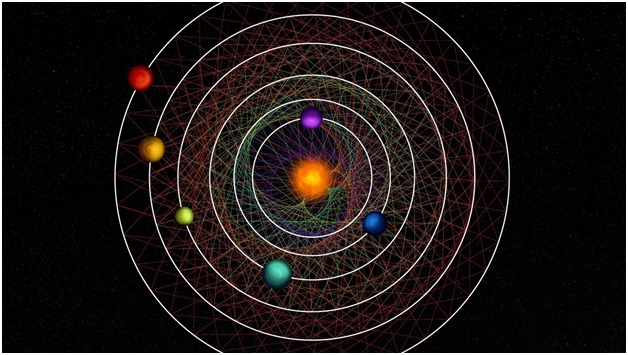
- 02 Dec 2023
Why is it in the News?
Recently astronomers have discovered an uncommon star system located just 100 light-years away from us, with six planets huddled immensely close to their host star.
What about sub-Neptunes?
- Sub-Neptunes are generally any planet that has a smaller radius than Neptune, although some could still be more massive.
- There are no sub-Neptunes in our solar system even though they are now known to be more common around other stars than Neptune-sized worlds.
- They might be rocky planets with thick atmospheres of hydrogen and helium gas, planets made of rock and ice bearing warm and water-rich atmospheres.
- These sub-Neptune planets were Initially detected in 2020 by NASA's Transiting Exoplanet Survey Satellite (TESS) and are about two to three times as big as Earth.
What are the findings?
- The newly discovered sub-Neptunes range from 1.9 to 2.9 times Earth's diameter.
- All appear to possess a large atmosphere.
- They and their star are located around 100 light-years from Earth.
- A light year is the distance light travels in a year, 5.9 trillion miles (9.5 trillion km).
- The system has six planets, all about the same size and they've barely changed since its formation up to 12 billion years ago.
- Their star, called HD110067, is visible in Earth's night sky in the northern constellation Coma Berenices.
- These undisturbed conditions make it ideal for learning how these worlds formed and whether they host life.
Clearing Corporation of India Limited (CCIL) (The Hindu)

- 02 Dec 2023
Why is it in the News?
The Reserve Bank of India (RBI) and the Bank of England (BoE) on Friday signed a Memorandum of Understanding (MoU) concerning cooperation and exchange of information in relation to the Clearing Corporation of India Ltd (CCIL).
About Clearing Corporation of India Limited (CCIL):
- The Clearing Corporation of India Ltd. (CCIL) was set up in April 2001 to provide guaranteed clearing and settlement functions for transactions in Money, G-Secs, Foreign Exchange, and Derivative markets.
- Objective: The prime objective has been to improve efficiency in the transaction settlement process, insulate the financial system from shocks emanating from operations-related issues, and undertake other related activities that would help to broaden and deepen the money, debt, and forex markets in the country.
- Promoters of CCIL: State Bank of India, IDBI Bank Ltd, ICICI Bank Ltd, Life Insurance Corporation of India (LIC), Bank of Baroda, and HDFC Bank Ltd.
- The company was incorporated with an authorised equity share capital of Rs. 50 crores.
- CCIL’s adherence to the stringent principles governing its operations as a Financial Market Infrastructure (FMI) has resulted in its recognition as a Qualified Central Counterparty (QCCP) by the Reserve Bank of India in 2014.
- CCIL is also the trade repository for all OTC transactions in the Forex, Interest Rate, and Credit derivative transactions.
- Through its fully owned subsidiary, Clearcorp Dealing Systems Limited (CDSL), CCIL has introduced various platforms for the electronic execution of deals in various market segments.
- Further, CDSL has developed, implemented, and manages the NDS-OM, the RBI-owned anonymous electronic trading system for dealing in G-Secs and also for reporting OTC deals, as well as the NDS-CALL platform, which facilitates electronic dealing in the Call, Notice & Term Money market.
Codex Alimentarius Commission (CAC) (PIB)
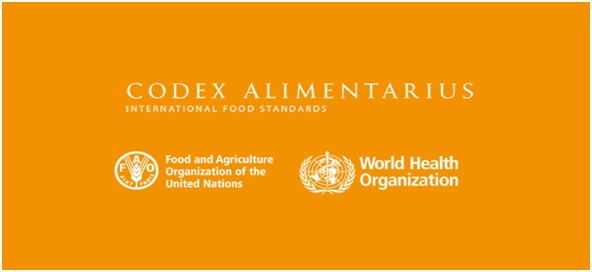
- 02 Dec 2023
Why is it in the News?
The Codex Alimentarious Commission (CAC) has recently praised India’s Standards on Millets and accepted its proposal for the development of global standards for millets during its 46th session held in Rome, Italy.
About Codex Alimentarius Commission (CAC):
- The Codex Alimentarious Commission (CAC) is an international food safety and quality standard-setting body created by WHO and FAO of the United Nations with 188 member countries.
- It is the body responsible for all matters regarding the implementation of the Joint FAO/WHO Food Standards Programme.
- Membership of the Commission is open to all Member Nations and Associate Members of FAO and WHO which are interested in international food standards.
- The Commission meets in regular session once a year alternating between Geneva and Rome.
- The programme of work of the Commission is funded through the regular budgets of WHO and FAO with all work subject to approval of the two governing bodies of the parent organizations.
- The Commission works in the six UN official languages.
- India has been a member of this commission since 1964.
- The 46th session of the Codex Alimentarius Commission (CAC) was held from 27 November to 2 December (2023) in Rome, Italy.
- In the current session, India has framed a comprehensive group standard for 15 types of millets specifying 8 quality parameters, which received resounding applause at the international meet.
- India put forward a proposal for the development of global standards for millet, particularly for Finger millet, Barnyard millet, Kodo millet, Proso millet, and Little millet as group standards as in the case of pulses.
Exercise Milan (The Hindu)
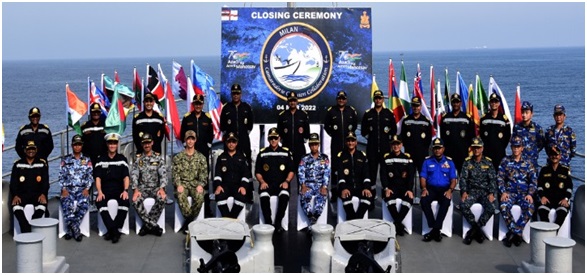
- 01 Dec 2023
Why is it in the News?
Indian Navy To Conduct One Of Its Largest Naval Exercises — MILAN — Next February; More Than Fifty Countries Expected To Participate
About Exercise Milan:
- Exercise Milan is a biennial multilateral naval exercise that began in 1995, and has since significantly expanded in scope and scale to become the largest exercise held by India.
- Initially involving only Indonesia, Singapore, Sri Lanka, and Thailand, it has evolved significantly in terms of participants and exercise complexity.
- Aligned with India's 'Look East Policy' initially, Milan expanded under the 'Act East Policy' and Security And Growth for All in the Region (SAGAR) initiative, welcoming Friendly Foreign Countries (FFCs).
- The mid-planning conference for Milan-24 occurred in October.
- The last edition of Milan, which is held off Visakhapatnam, saw participation from over 40 countries showcasing its substantial growth in scale and international engagement.
- The next edition of Exercise MILAN is scheduled to be held in February 2024 and is expected to see the participation of over 50 countries.
- It reflects the significant expansion of the Navy’s engagements as well as its capacity to assist countries in the Indian Ocean Region (IOR) as the first responder and Preferred Security Partner.
Sindhudurg Fort (Financial Express)
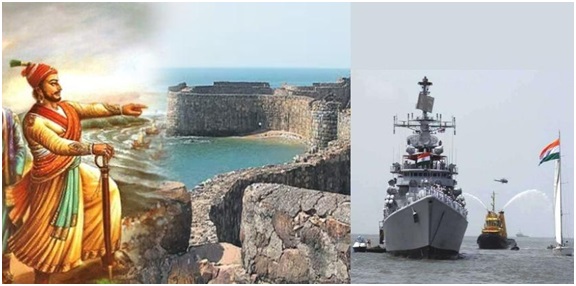
- 01 Dec 2023
Why is it in the News?
The Indian Navy is gearing up to showcase its operational prowess in a significant ‘Operational Demonstration’ scheduled for December 4, 2023, at Sindhudurg Fort in Maharashtra.
About Sindhudurg Fort:
- Sindhudurg Fort is a historically significant stronghold situated on an islet in the Arabian Sea, just off the coast of Maharashtra in western India.
- Positioned on Kurte Island near Malvan town in Sindhudurg District within the Konkan region of Maharashtra, this formidable fortress was commissioned and constructed under the reign of Chhatrapati Shivaji Maharaj of the Maratha Empire in 1664.
- The primary objective behind its construction was to counteract the escalating influence of foreign colonizers, including English, Dutch, French, and Portuguese merchants, and to curb the rise of the Siddis of Janjira.
- The Bakhar (a form of historical narrative written in Marathi prose) written by Chitragupta aptly mentions this fort as the most invaluable asset to Shivaji Maharaj.
Key Features:
- The fort spans 48 acres and boasts fortified walls that are 29 feet high and 12 feet thick, extending for a distance of two miles.
- Guarding these walls are 52 bastions equipped with embrasures for cannons.
- Access to the fort is through the Dilli Darwaja, the main gate, uniquely designed to blend seamlessly with the walls and visible only from close quarters.
- The fort is surrounded by several smaller forts, including Padmagad, Rajkot, and Sarjekot.
- An intriguing feature within the fort is a slab bearing the handprint and footprint of Chhatrapati Shivaji Maharaj.
- Additionally, a small temple dedicated to the Maratha King is situated within the fort's bounds
Asola Bhatti Wildlife Sanctuary (Indian Express)
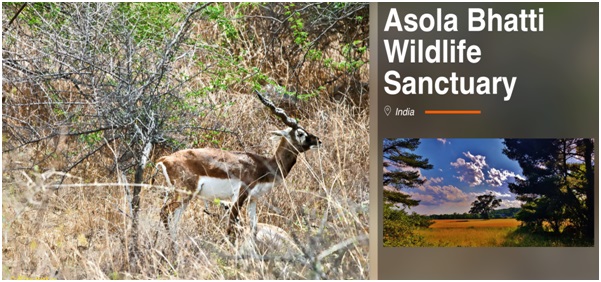
- 01 Dec 2023
Why is it in the News?
The Delhi High Court has criticized the forest department's proposal to hold a walkathon and cyclathon in a wildlife sanctuary, calling it a "haphazard exercise."
About Asola Bhatti Wildlife Sanctuary:
- Asola Bhatti Wildlife Sanctuary covers 32.71 sq. km on the Southern Delhi Ridge of the Aravalli hill range, bordering Delhi and Haryana.
- It's in Southern Delhi and parts of Faridabad and Gurugram districts in Haryana.
- It's a part of the Sariska-Delhi Wildlife Corridor, linking Sariska Tiger Reserve in Rajasthan to Delhi Ridge.
- The sanctuary gets its name from the contiguous Asola village near Tughlaqabad in the Delhi NCR.
- Vegetation: The vegetation is classified as Northern Tropical Thorn Forests, known for thorny appendages and special leaves.
- The climate has extreme summer heat and significant winter cold due to its inland position.
- Flora: The main exotic plant is Prosopis juliflora, and the primary native plant is Diospyros montana.
- Fauna: The sanctuary is home to various animals like Golden Jackals, striped hyenas, Indian Crested Porcupines, Civets, Jungle Cats, Snakes, Monitor Lizards, and Mongoose.
- This sanctuary plays a crucial role in connecting wildlife across different areas.
World AIDS Day 2023 (Indian Express)
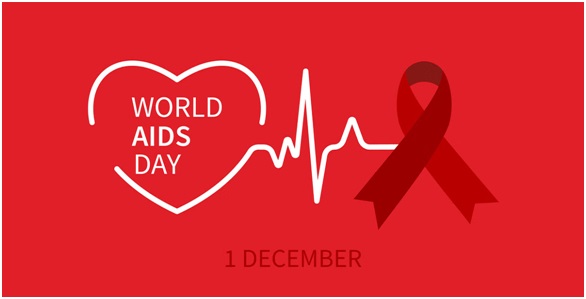
- 01 Dec 2023
Why is it in the News?
On the World AIDS Day 2023, observed each year on December 1, the World Health Organisation emphasised recognising and remembering the contribution of communities in controlling HIV-AIDS.
About World AIDS Day 2023:
- World AIDS Day which is observed every year on December 1 is a global movement to unite people in the fight against HIV and AIDS.
- Since 1988, when the World Health Organisation (WHO) recognised the day, communities have stood together on World AIDS Day to show strength and solidarity against HIV stigma and to remember lives lost.
- It is an opportunity to reflect on the progress made to date and raise awareness about the challenges that remain to achieve the goals of ending AIDS by 2030.
- The theme of World AIDS Day 2023 is– “Let Communities Lead"
What is HIV/AIDS?
- Human Immunodeficiency Virus (HIV) is a virus that attacks the immune system, compromising the body's ability to fight off infections and diseases.
- Acquired Immunodeficiency Syndrome (AIDS) is the advanced stage of HIV infection, characterized by severe immune system damage.
- Transmission: HIV spreads through unprotected sexual contact, sharing contaminated needles, and from an infected mother to her child during childbirth or breastfeeding.
- Treatment: Antiretroviral Therapy (ART) is the primary treatment for HIV/AIDS, managing the virus and supporting the immune system.
- Lifelong adherence is essential, ensuring viral suppression.
- Regular monitoring by healthcare providers is vital, and global challenges such as stigma and healthcare access persist in the fight against HIV/AIDS.
Gajraj Suraksha (Elephant Safety) System (New Indian Express)
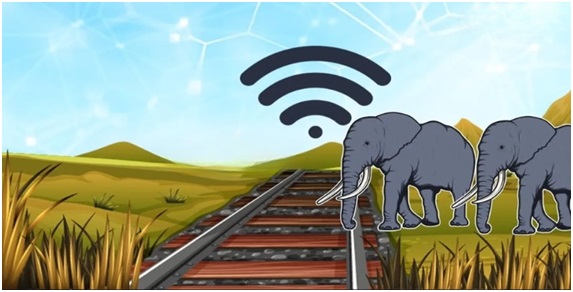
- 01 Dec 2023
Why is it in the News?
"In a first", through cutting-edge indigenous technology, the Indian Railways has successfully developed a system, preliminarily called as ‘Gajraj Suraksha (Elephant safety) system’ to prevent elephant–train collisions in the forest areas.
About Gajraj Suraksha:
- Gajraj Suraksha uses an AI-based algorithm and a network of sensitive optical fiber cables to detect elephants approaching railway tracks, aiming to address elephant fatalities resulting from train accidents.
- How this will work?
- The system functions by sensing pressure waves generated by elephant movements along the tracks.
- As elephants move, the optical fibers detect vibrations from their footsteps, triggering signals within the fiber network.
- This enables the system to identify elephants up to 200 meters ahead of their arrival on the track.
- The Optical Fibre Cable (OFC)-based Intrusion Detection System sends alarms to station masters upon detecting movement along the tracks.
- The network is designed to accurately track elephant movement, allowing prompt communication to nearby station masters.
- This ensures timely information to locomotive drivers, facilitating the slowing down or stopping of trains to prevent potential collisions with elephants.
- The Indian Railway plans to introduce this system in West Bengal, Odisha, Jharkhand, Assam, Kerala, certain parts of Chhattisgarh, and Tamil Nadu.
Digital Crop Survey System (Indian Express)
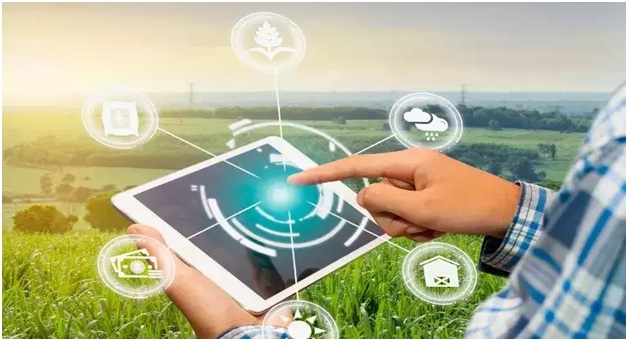
- 19 Oct 2023
Why in the News?
Emphasizing the current manual nature of crop area and production estimation, the Central Government has urged states and Union Territories (UTs) to transition to a digital approach by implementing the Digital Crop Survey System starting in July next year.
About the Digital Crop Survey:
- As a part of the Digital Crop Survey initiative, the Ministry of Agriculture and Farmers Welfare (MoA&FW) has instructed states to capture data on essential parameters, encompassing:
- Village name, year, season, farmer ID, farm ID,
- Crop name (at the farm plot level),
- Crop variety,
- Crop sown area (at the farm plot level),
- Geotags of crop photos,
- Geotags of the farm boundary where the crop is cultivated,
- Sowing/planting date (at the farm plot level),
- Irrigation type (at the farm plot level), and
- Irrigation source (at the farm plot level).
- This directive follows the introduction of a pilot Digital Crop Survey across multiple states earlier this year.
- In a parallel initiative, the MoA&FW has also revised the release timelines for crop estimates.
- Previously conducted in five phases, the ministry has streamlined the process by eliminating the fourth phase traditionally released in August.
- The ministry now plans to unveil comprehensive final estimates encompassing all states and seasons (kharif, rabi, summer) in September-October, departing from the earlier practice of releasing final estimates in February of the subsequent year.
Guidelines for the Digital Crop Survey:
- According to sources, the Economics, Statistics and Evaluation Division (ESED) under the Ministry of Agriculture and Farmers’ Welfare (MoA&FW), has finalised the guidelines.
- According to the guidelines, all states/ UTs shall automate/digitise the process of area enumeration/girdawari of crops at field level, i.e., Digital Crop Survey, from 2024-25 Agricultural Year.
- In India, the agriculture year begins in July and ends in June, the following year.
- Under the guidelines, states and UTs shall use GPS-enabled mobile applications for collecting crop-sown data of each plot for each season and share the village-level aggregated data with DA&FW through API only.
Need for the Digital Crop Survey:
- The current methodology for gathering and consolidating crop statistics relies entirely on manual processes across most states, leading to delays and human errors in the data compilation.
- Only a handful of states, such as Karnataka, Telangana, and Andhra Pradesh, have embraced a digital approach to data collection through GPS-enabled mobile applications, particularly for the recording of crop area and Collection of Cost of Cultivation and Equipment Survey (CCEs) data directly from the fields.
- While Maharashtra and Madhya Pradesh have implemented digital systems, they are primarily focused on recording crop areas.
- India faces a challenge due to the lack of dependable agricultural production estimates, accentuating the necessity for a "real-time assessment estimate" of crops.
- Recognizing this gap, there is a compelling need to modernize the current production estimation system by incorporating technological interventions.
Organized Crime and Corruption Reporting Project (OCCRP) (The Hindu)
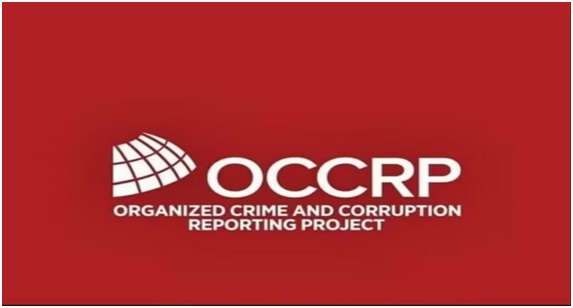
- 19 Oct 2023
Why in the News?
The Securities and Exchange Board of India (SEBI) has recently requested the Organized Crime and Corruption Reporting Project (OCCRP) to provide access to "essential documents" related to the accusations of stock manipulation and accounting fraud against the Adani Group.
About the Organized Crime and Corruption Reporting Project (OCCRP):
- The Organized Crime and Corruption Reporting Project (OCCRP) is a nonprofit investigative reporting platform that collaborates with over 50 independent media outlets worldwide, producing over 100 investigations annually.
- Established in 2006, its mission is to conduct transnational investigative reporting and advocate for technology-based approaches to expose organized crime and corruption on a global scale.
- The organization strives to cultivate and empower a global network of investigative journalists, publishing their stories to shed light on crime and corruption, enabling the public to hold those in power accountable.
Vision:
- OCCRP envisions a world where lives, livelihoods, and democracy are not jeopardized by crime and corruption.
- The organization is committed to exposing malfeasance so that the public can actively hold institutions accountable.
Core Initiatives:
- Global Investigative Network: OCCRP facilitates a global network of investigative journalists, providing them with essential resources and tools.
- This includes digital and physical security measures, enabling journalists covering sensitive topics to collaborate effectively with trusted editors.
- An investigative data platform, OCCRP Aleph empowers journalists to search and cross-reference over three billion records, unveiling criminal connections and patterns.
- This platform facilitates efficient cross-border collaboration among journalists.
- Training and Skill Development: OCCRP offers training programs to reporters and partners, equipping them with advanced journalism techniques, and enhancing their investigative capabilities.
- Partnerships for Change: OCCRP collaborates with advocacy groups, arming civil society with information to advocate for justice and transformative change.
- The organization also uncovers evidence that empowers law enforcement to take meaningful action.
Kati Bihu (PIB)
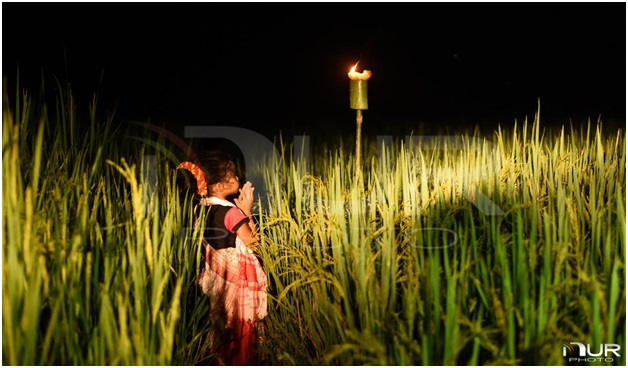
- 19 Oct 2023
Why in the News?
The Prime Minister, Narendra Modi recently extended best wishes on the auspicious occasion of KatiBihu to the people of Assam.
About Kati Bihu:
- Kati Bihu is an annual celebration observed in the state of Assam, signifying the relocation of rice saplings.
- The term "Kati" translates to cutting, representing the agricultural activity during this period.
- Also known as Kongali Bihu, with "Kongali" connoting a state of poverty, the festival holds cultural significance in Assam alongside two other Bihu festivals—Bhogali or Magh Bihu in January and Rongali or Bohag Bihu in April.
Significance:
- In this month, food resources are scarce, prompting people to celebrate by illuminating their homes with earthen lamps or candles.
- Lighting lamps near the Tulsi plant are a central aspect of the festival, signifying devotion and auspiciousness.
- People light a special lamp known as "Akash Banti" (Sky candle) in their paddy fields. Fueled by mustard oil, these lamps are elevated on bamboo poles.
- The belief prevails that the illuminated lamps guide the spirits of ancestors toward their heavenly abode.
Bhimashankar Temple (HT)
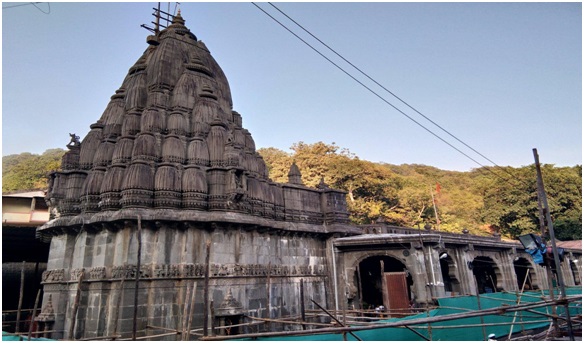
- 19 Oct 2023
Why in the News?
Tensions escalated at the Bhimashankar temple recently as a dispute unfolded between two groups of religious leaders, referred to as pujaris, regarding the leadership of the puja ceremony, leading to a brawl.
Bhimashankar Temple Overview:
- The Bhimashankar Temple is an ancient Hindu shrine dedicated to Lord Shiva, located amidst the Sahyadri hills in the Pune District of Maharashtra.
- Recognized as one of the 12 holy Jyotirlinga shrines in India, it holds immense spiritual significance.
- In recent times, it has gained additional importance as it was designated a "Wildlife Sanctuary," forming part of the Western Ghats and serving as the source of the Bhima River.
Historical Significance:
- Constructed around the 13th century, the temple is a testament to the craftsmanship of Vishwakarma sculptors.
- Subsequent enhancements, including the addition of spires (shikhara) by Maratha Empire statesman Nana Phadnavis in the 18th century, contribute to its historical evolution.
- Chhatrapati Shivaji Maharaj, the Maratha ruler, is believed to have played a role in fostering worship at the temple through his endowments.
Architectural Marvel:
- A blend of old and new structures in the Nagara style of architecture, the Bhimashankar Temple boasts spacious courtyards, intricate wall carvings, and imposing pillars.
- The sanctum, or Garbhgriha, houses the sacred Jyotirlinga, positioned at a lower level. The Swayambhoo, a self-emanated Shiv Linga, holds a central place in the Sanctum Sanctorum.
- Exquisite mythological carvings adorn the massive pillars and doorframes, depicting divine figures and sacred symbols.
- Additionally, the temple encompasses an ancient shrine dedicated to Lord Shani, considered auspicious by devotees, and features the revered Nandi statue at its entrance.
What are Jyotirlingas?
- Jyotirlingas are shrines where Lord Shiva is worshipped in the form of a Jyotirlingam, representing different manifestations of the deity.
- Among the 12 main Jyotirlingas in India, Bhimashankar Jyotirlinga is one.
- Each of these sacred shrines is named after its presiding deity and holds unique spiritual significance for devotees across the country:
- Somnath Jyotirlinga in Gir, Gujarat
- Mallikarjuna Jyotirlinga in Srisailam, Andhra Pradesh
- Mahakaleshwar Jyotirlinga in Ujjain, Madhya Pradesh
- Omkareshwar Jyotirlinga in Khandwa, Madhya Pradesh
- Baidyanath Jyotirlinga in Deoghar, Jharkhand
- Bhimashankar Jyotirlinga in Maharashtra
- Ramanathaswamy Jyotirlinga in Rameshwaram, Tamil Nadu
- Nageshwar Jyotirlinga in Dwarka, Gujarat
- Kashi Vishwanath Jyotirlinga in Varanasi, Uttar Pradesh
- Trimbakeshwar Jyotirlinga in Nasik, Maharashtra
- Kedarnath Jyotirlinga in Rudraprayag, Uttarakhand
- Ghrishneshwar Jyotirlinga in Aurangabad, Maharashtra
Siena Galaxy Atlas (SGA) (Space)
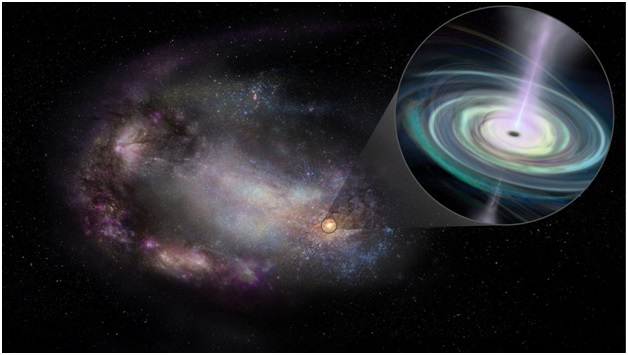
- 19 Oct 2023
Why in the News?
Astronomers have recently crafted a stunning atlas comprising 400,000 galaxies situated in the cosmic vicinity of the Milky Way, aptly named the Siena Galaxy Atlas.
About the Siena Galaxy Atlas:
- It is a digital atlas designed to help learn more about our universe by highlighting a number of well-known galaxies.
- It was produced using information gathered from three astronomical surveys conducted at Kitt Peak National Observatory (KPNO) and Cerro Tololo Inter-American Observatory (CTIO) between 2014 and 2017. These surveys collectively are referred to as the DESI Legacy Surveys.
Distinguishing Features:
- Setting itself apart from previous atlases, the Siena Galaxy Atlas relies on state-of-the-art digital images captured by advanced technology.
- Unlike its predecessors, which utilized outdated equipment and photographic plates, this atlas leverages highly sensitive instruments to produce the most precise and accurate data available.
- Notably, it marks the first cosmic atlas to showcase the light profiles of galaxies—a curve illustrating the variation in brightness from the galaxy's brightest point to its dimmest.
Significance:
- The introduction of the Siena Galaxy Atlas carries immense importance in astronomical exploration for several reasons:
- By relying on digital images captured with advanced instruments, the atlas ensures a level of precision and detail that surpasses previous methods, enhancing the overall quality of data.
- Light Profiles of Galaxies: A pioneering feature, the inclusion of light profiles in the atlas provides a unique perspective, allowing astronomers to glean valuable insights into the structure and characteristics of galaxies.
- Pattern Recognition: Cosmic atlases, such as the Siena Galaxy Atlas, play a pivotal role in aiding astronomers in identifying patterns.
- This capability is particularly valuable in categorizing phenomena like transient events, such as stars that exhibit sudden flares and then disappear.
- The atlas facilitates the identification of celestial objects worthy of more detailed follow-up studies, enabling astronomers to delve deeper into specific areas of interest.
- From unravelling the mysteries surrounding the birth and evolution of galaxies to investigating the distribution of dark matter and the propagation of gravitational waves through space, the Siena Galaxy Atlas serves as a versatile tool for astronomers in their cosmic pursuits.
AERA Warns Indian Airport Operators Against Charging Unapproved Tariffs (TOI)

- 13 Oct 2023
Why in the News?
The Airport Economic Regulatory Authority (AERA) issued a warning to major airports about levying aeronautical charges without approval.
About Airports Economic Regulatory Authority (AERA):
- Airports Economic Regulatory Authority (AERA), established under the Airports Economic Regulatory Authority of India Act, 2008, is a statutory body entrusted with the crucial task of regulating tariffs and associated charges for aeronautical services at major airports.
- This includes overseeing air traffic management, aircraft landing and parking, and ground handling services.
- The designation of an airport as "major" hinges on the 2008 Act, considering an annual passenger traffic threshold of at least 15 lakh.
- An amendment in 2019 elevated this criterion to 35 lakh annual passengers.
- For other airports, tariff determination falls under the purview of the Airports Authority of India (AAI).
- As an independent economic regulator, AERA operates with the objective of creating an equitable playing field, fostering healthy competition among major airports, promoting investment in airport facilities, and ensuring transparent regulation of aeronautical service tariffs.
- This initiative arose from the recognition of the need for an independent regulatory body capable of safeguarding the interests of both service providers and consumers.
- Headquartered in Delhi, AERA's history traces back to a time when most Indian airports were under the governance of the central government.
- The shift towards private sector participation in airport infrastructure development prompted the need for a distinct regulator.
- The Naresh Chandra Committee set up in 1997, recommended the establishment of an independent regulatory authority.
- Subsequently, the Airports Economic Regulatory Authority of India Act, 2008 (AERA Act), was enacted, leading to the creation of AERA.
About Airports Authority of India (AAI):
- Airports Authority of India (AAI), established through an Act of Parliament on April 1, 1995, resulted from the merger of the National Airports Authority and the International Airports Authority of India.
- Entrusted with a significant role, AAI is responsible for creating, upgrading, maintaining, and managing civil aviation infrastructure both on the ground and in the airspace of the country.
- Main Functions of AAI Include
- Construction, modification, and management of passenger terminals.
- Development and management of cargo terminals.
- Development and maintenance of apron infrastructure, encompassing runways, parallel taxiways, aprons, etc.
- Provision of Communication, Navigation, and Surveillance, involving DVOR / DME, ILS, ATC radars, visual aids, etc.
- Provision of air traffic services.
- Provision of passenger facilities and related amenities at its terminals.
Bihar’s Only Ramsar Site 'Kanwar Lake' Drying Up (DownToEarth)
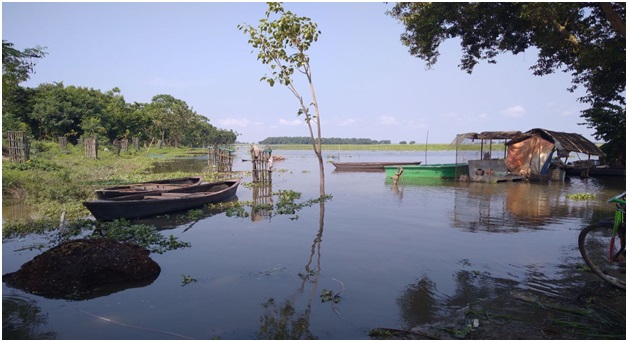
- 13 Oct 2023
Why in the News?
Bihar’s only wetland of international importance under the Ramsar Convention lies neglected and is on the brink of drying up, even as the state is pitching other waterbodies for classification.
About Kanwar Lake:
- Kanwar Taal, known as Kabar Taal or Kabartal Wetland, is an oxbow lake in Begusarai district, Bihar, India.
- It is the largest freshwater oxbow lake in Asia, covering an area of 67.5 km².
- The lake was established as a bird sanctuary in 1987 and is now a designated Ramsar site since 2020.
- Covering the majority of the Indo-Gangetic plains in northern Bihar, this lake was declared a Ramsar site in 2020, making it the first wetland in Bihar to be included in the Ramsar convention.
- Kanwar Taal is a significant wetland in Bihar and is an essential stopover for migratory waterbirds along the Central Asian Flyway.
- The lake provides vital flood absorption during the monsoon season and supports agriculture during the dry season.
- It also houses five critically endangered species and over 50 fish species.
- Biodiversity: Kanwar Taal is rich in biodiversity.
- It is home to a wide range of plant and animal species.
- It supports 165 plant species and 394 animal species, including 221 species of birds.
- These bird species include both resident and migratory birds, with the lake serving as an important stopover point for migratory waterbirds travelling along the Central Asian Flyway.
- Flood Absorption: The wetland plays a crucial role in flood absorption during the monsoon season.
- It helps in reducing the impact of floods in the region by absorbing excess water, which is important for flood control and the protection of nearby areas.
- Agricultural Support: During the dry season, Kanwar Taal supports agriculture in the surrounding areas.
- The water from the lake is used for irrigation, benefiting local farmers and contributing to the region's agricultural productivity.
- Endangered Species: The wetland is home to five critically endangered species, highlighting its significance in conserving rare and threatened wildlife.
- Additionally, it hosts over 50 fish species, contributing to the aquatic biodiversity of the region.
What are Oxbow Lakes?
- Oxbow lakes are crescent-like water bodies formed due to erosion and deposition in meanders of rivers.
- Meanders are loops or curved structures formed in the course of a river due to friction or tectonic activity.
- The speed of water flow in the outer section of this meander is more than the inner part causing its neck to become narrower over time.
- Eventually, the size of this loop increases making it harder for the river to flow through it so it opts for a straight path.
- Finally, the ends of this meandered loop are separated by deposition of sediments or silt separating the river and a horseshoe-like structure called oxbow lake.
Data Analytics Dashboard” and “Poorvottar Sampark Setu” Portal Launched (PIB)
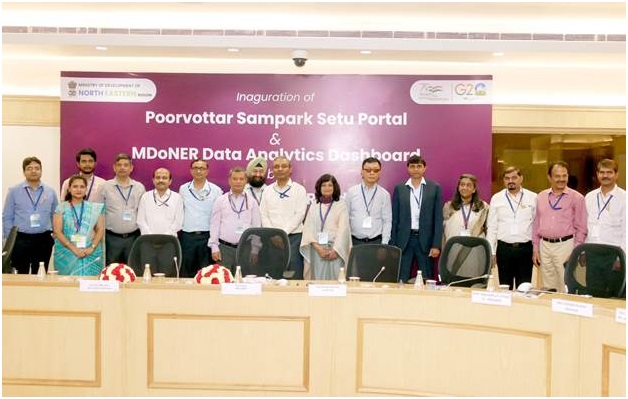
- 13 Oct 2023
Why in the News?
The Union Ministry of Development of the North-East Region virtually launched the “MDoNER Data Analytics Dashboard” and “Poorvottar Sampark Setu” portal at Vigyan Bhawan, New Delhi recently.
About Poorvottar Sampark Setu Portal:
- The Poorvottar Sampark Setu portal is a robust tool designed to streamline and improve the monitoring of Union Ministers' fortnightly visits to the North Eastern Region (NER)
Key features include:
- Insightful Dashboard: The portal offers a comprehensive dashboard presenting valuable insights and graphical information on state-wise/district-wise visits to NER by Union Ministers, serving as a centralized resource for stakeholders.
- Curated Minister List: It generates a curated list of Ministers eligible for nomination for visits to NER in the upcoming months, facilitating efficient planning.
- Online Tour Reporting: After their visit, Ministers can conveniently submit tour reports and recommendations online, streamlining the reporting process.
- Recommendation Analysis: MDoNER (Ministry of Development of North Eastern Region) can analyze and forward the received recommendations to respective line Ministries, Departments, and State Governments for prompt action.
- Summary Report Generation: The portal offers a one-click summary report generation feature, simplifying the overview of visits for effective decision-making.
What is the MDoNER Data Analytics Dashboard?
- The MDoNER Data Analytics Dashboard is a comprehensive platform integrating data from 112 schemes across 55 Departments and Ministries.
Its key benefits include:
- Data-Driven Decision Making: Empowers stakeholders with data-driven insights for informed decision-making.
- Operational Efficiency: Streamlines operations, ensuring a seamless and efficient workflow.
- Centralized Monitoring: Provides a centralized hub for monitoring diverse schemes and initiatives.
- Policy-Level Decision Tool: Functions as a valuable tool for crafting policies based on robust data analysis.
- Information Integration: Integrates information seamlessly, fostering coherence and accessibility.
- Focused Monitoring: Keeps a vigilant eye on NER Aspirational districts, North East border districts, and the most backward districts in NER for targeted interventions.
Modi’s Visit to Gunji Irks Nepal Opposition (Indian Express)
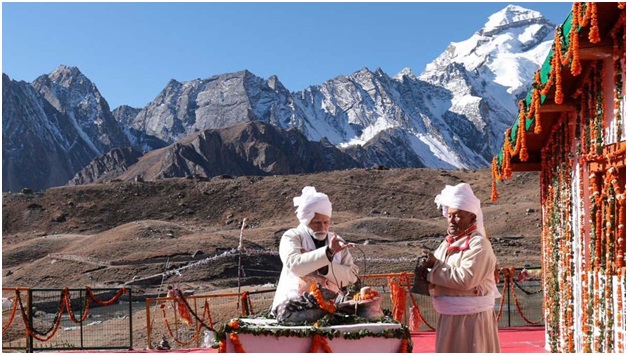
- 13 Oct 2023
Why is it in the News?
Prime Minister Narendra Modi’s visit to Gunji near Kalapani, Uttarakhand has triggered an uproar in Nepal.
About Gunji Village:
- Gunji Village, situated in the Dharchula tehsil of Pithoragarh district in northern Uttarakhand, holds a strategic location near the borders of Tibet and Nepal.
- Nestled at an altitude of 3500 meters, it marks the confluence of the Kuthi Yankti and Kalapani Rivers at the eastern end of the Kuthi Valley, offering stunning views of Mount Api in Nepal.
- Covering a geographical area of 188.9 hectares, Gunji is a seasonal abode for its inhabitants.
- During winters, the residents, totalling 335 people in 194 households as per the 2011 census, migrate to lower altitudes, primarily to Dharchula within the same district.
- The village is under the administration of a Sarpanch, the elected head.
- Renowned for its connection to the traditional Indian/Nepalese route to Kailas–Manasarovar, Gunji attracts visitors seeking its breathtaking vistas.
- To embark on a journey to Gunji, obtaining an Inner Line permit is a prerequisite.
What is an Inner line permit (ILP)?
- An Inner Line Permit (ILP) is an official travel document issued by the Government of India, facilitating the inward travel of Indian citizens into a protected area for a limited duration.
- It is mandatory for Indian citizens residing outside these specific states to secure a permit before entering the designated state.
- This document serves as a regulatory measure by the government to manage and monitor the movement of individuals into areas located in proximity to India's international borders.
- The concept originates from the Bengal Eastern Frontier Regulations of 1873, designed to safeguard the Crown's interests in trades such as tea, oil, and elephants by restricting the entry of "British subjects" into these designated "Protected Areas.
- In 1950, the term "British subjects" was replaced by "Citizen of India."
- ILPs come in various types, including those for tourists and others intended for individuals planning extended stays, often for employment purposes.
CSIR-CCMB Study to Understand the Genetics Behind Diseases (The Hindu)

- 13 Oct 2023
Why in the News?
The project — “Diverse Epigenetic Epidemiology Partnership (DEEP)” — aims to uncover the effects of genomic and environmental diversity on disease risk observed in people across the world, including those in Asia, Africa and North and South America.
About the Project, The Diverse Epigenetic Epidemiology Partnership (DEEP):
- The Diverse Epigenetic Epidemiology Partnership (DEEP) is a pioneering genomics and epigenomics initiative aimed at unravelling the genetic underpinnings of Non-Communicable Diseases (NCDs) in diverse populations, including South Asians.
- This five-year international project seeks to illuminate the impact of genomic and environmental diversity on disease risk across global populations, spanning Asia, Africa, and North and South America.
- Researchers will examine individuals from varied genetic and environmental backgrounds, analyzing DNA methylation patterns to discern their contributions to disease risk within each context.
- The study involves the development of software, infrastructure, and advanced statistical analyses to create new resources, integrated with existing international health and genetics databases for assessing trends in DNA methylation variation.
- This initiative holds significance as it aims to identify common and region-specific disease-causing mechanisms, addressing questions about the universal effectiveness of medicines and paving the way for targeted interventions to reduce global health disparities.
What is DNA methylation?
- DNA methylation is a molecular process involving the attachment of chemical groups to DNA, influencing the activation and deactivation of genes.
- This epigenetic modification plays a crucial role in enabling the body to respond to environmental signals, thereby contributing to overall systemic health and disease status.
- The intricate interplay between DNA methylation, genetics, and the environment is essential for unravelling the pathways that underlie health and disease, providing insights into their interconnected consequences.
DGCA Implements New Rules for Hang Gliders (Business Standard)
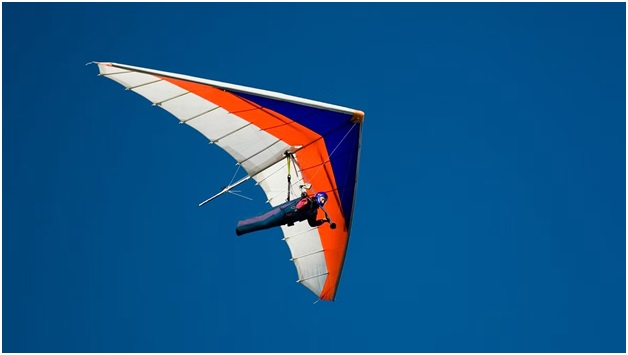
- 18 Oct 2023
Why in the News?
Aviation regulator DGCA has issued amended norms for operating powered hang gliders in the country.
About Hang Gliders:
- A hang glider is a distinctive type of aircraft that relies on air currents to remain airborne, setting it apart from conventional aircraft with engines and propellers.
- These aerodynamic marvels depend on wind dynamics for lift rather than propulsion.
- Operational Mechanics: Due to their unpowered nature, hang gliders necessitate launching from elevated points such as hills or mountains.
- Gravity, acting as the primary force, encompasses the weight of both the pilot and the wing.
- This weight generates thrust, propelling the aerofoil through the air.
- The aerofoil's distinctive shape prevents the hang glider from descending rapidly and facilitates lift.
- The aerofoil's design manipulates airflow, compelling the air above the wing to move faster, creating a low-pressure area.
- Simultaneously, the wing's downward and forward motion compresses the air beneath, fostering lift as the aerofoil is drawn into the low-pressure zone.
- Pilots maintain control during flight by manipulating the trapeze and adjusting direction and speed.
- Powered Hang Gliders: In a departure from traditional hang gliders, powered hang gliders integrate features of both hang gliders and powered aircraft.
- Equipped with a small engine, these variants enable pilots to take off and sustain flight without relying on natural elements like thermals or wind conditions, making them accessible to less-experienced aviators.
DGCA Regulations for Powered Hang Gliders:
The Directorate General of Civil Aviation (DGCA) mandates strict regulations governing powered hang gliders:
- Operation Authorization: Individuals must obtain prior authorization from a DGCA-approved examiner or instructor before operating a powered hang glider.
- Examiner Qualifications: Approved examiners must possess a minimum of 50 hours of experience on powered hang gliders, including at least 10 hours on a dual machine.
- Test Flight Criteria: Individuals conducting test flights must meet specific criteria, holding a valid Commercial Pilot Licence (CPL) with at least 25 hours of flying experience on a powered hang glider or authorization with 50 hours of flying experience.
- Transaction Certification: The sale or transfer of a powered hang glider requires a DGCA-issued certificate following a background check conducted by the Ministry of Home Affairs (MHA).
- Lease and Operation Restrictions: Owners or operators are prohibited from leasing, renting, or lending powered hang gliders.
- The use of certain equipment and devices is strictly regulated, with explicit permissions required.
- Safety Protocols: Security measures endorsed by the Bureau of Civil Aviation Security (BCAS) are obligatory at parking and operational locations, ensuring compliance with established guidelines for safe flight operations.
Is Halley’s Comet returning? (India Today)
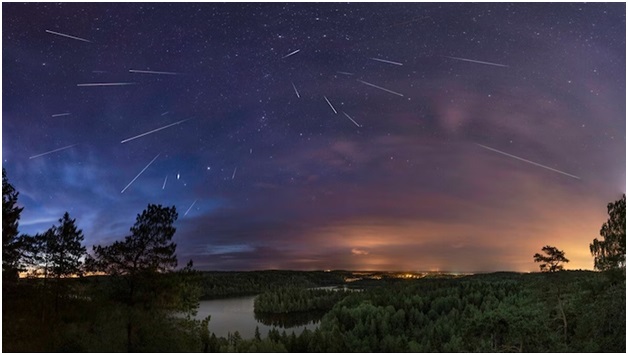
- 18 Oct 2023
Why in the News?
The celestial calendar for 2023 is set to offer a spectacular show as the Orionid meteor shower is expected to rain down its greatest number of meteors on the mornings of October 21 and 22.
About the Orionid Meteor Shower:
- An annual celestial spectacle illuminating the night sky every October, the Orionid meteor shower is a captivating phenomenon with a fascinating origin.
- This cosmic event transpires as Earth traverses the remnants of debris left by Halley's Comet, officially designated as 1P/Halley.
- Halley's Comet, on a roughly 76-year orbit around the sun, sheds dust particles from its nucleus during each passage through the inner solar system.
- This process creates a distinctive trail of debris along its path.
- In late October each year, Earth intersects this celestial trail, giving rise to the mesmerizing display known as the Orionid meteor shower.
- Measuring about five by nine miles in size, Halley's Comet undergoes a remarkable transformation, losing between three to ten feet of material with each journey through the inner solar system.
- The resulting debris becomes the source of the Orionid meteors.
- This celestial event offers a visual treat for observers in both the Northern and Southern hemispheres, particularly during the post-midnight hours.
- It provides an opportunity to witness the graceful streaks of light as the meteors traverse the night sky.
What are Meteors?
- Meteors, often referred to as "shooting stars," are a captivating manifestation of meteoroids entering Earth's atmosphere at high speed and subsequently burning up.
- Meteor showers, occurring annually or at regular intervals, are linked to the Earth passing through the dusty debris trail left behind by a comet.
- In the case of the Orionid meteor shower, the meteors are named after the constellation Orion, close to where these luminous streaks appear in the sky.
- This annual celestial event not only captivates observers with its dazzling display but also serves as a reminder of the dynamic interactions between Earth and the celestial bodies that grace our cosmic neighbourhood.
Microalgae are Adapting to Warming Climate (DownToEarth)
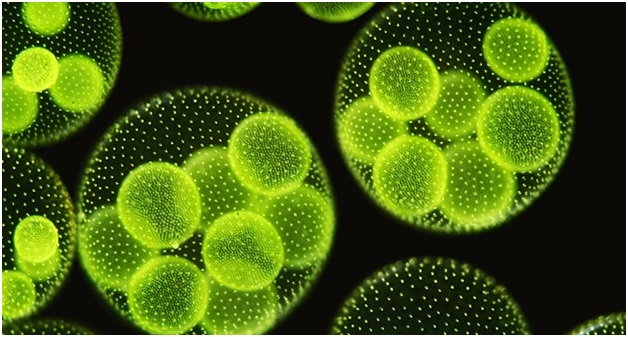
- 18 Oct 2023
Why in the News?
A recent study finds microalgae are firing up a light-responsive protein to use sunlight for growth.
What is the Microalgae?
- Microalgae are microscopic algae prevalent in freshwater and marine environments, consisting of unicellular species that can exist independently or in chains and groups.
- Comprising unicellular algal varieties such as green algae, diatoms, and dinoflagellates, these organisms exhibit sizes ranging from a few micrometres to several hundred micrometres.
- Their colour, determined by predominant pigments, categorizes them into groups like green, red, or brown.
- Unlike higher plants, microalgae lack roots, stems, or leaves, and they predominantly engage in photosynthesis, fueled by photosynthetic pigments.
- Heterotrophic microalgae, lacking these pigments, rely on other organisms for sustenance.
Significance:
- Microalgae play a foundational role in the aquatic food chain, offering vital nutrients for zooplankton, small fish, and various aquatic organisms.
- They serve as a primary food source for filter-feeding organisms.
- Moreover, photosynthetic microalgae contribute significantly to global carbon and oxygen cycles, absorbing carbon dioxide and generating oxygen through photosynthesis.
- Approximately half of atmospheric oxygen is produced by these organisms.
- Microalgae can also establish symbiotic relationships, as seen in their association with corals (zooxanthellae), providing nutrients through photosynthesis.
- Certain microalgae, like Nostoc, Anabaena, and Oscillatoria, exhibit nitrogen-fixing capabilities.
- Additionally, microalgae are rich in nutrients and can be consumed by humans. Notable examples like Spirulina and Chlorella are often utilized as dietary supplements.
What are Macroalgae?
- Macroalgae, commonly known as seaweeds, are marine plants engaging in photosynthesis but reproducing without flowers.
- Visible to the naked eye, in contrast to microalgae, they typically grow attached to the seabed or reef substrate.
- These macroscopic algae play crucial roles in reef ecosystems, providing both food and habitat for a diverse array of species while contributing significantly to nutrient dynamics.
Diphtheria Outbreak in Guinea (WHO)
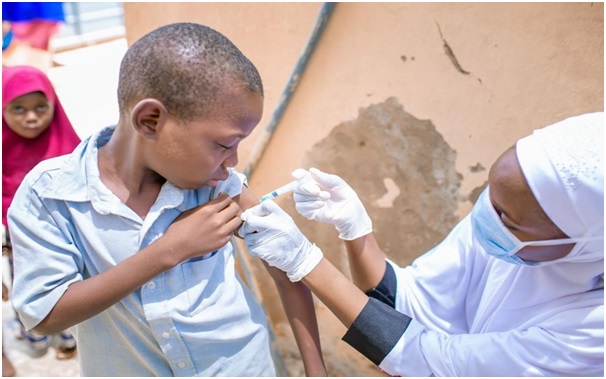
- 18 Oct 2023
Why in the News?
The World Health Organization (WHO) has announced that Guinea's Health Ministry has officially notified them of a diphtheria outbreak.
What is Diphtheria?
- Diphtheria, an extremely contagious and infectious disease, instigates severe inflammation in the nose, throat, and trachea (windpipe).
- This ailment is caused by strains of bacteria known as Corynebacterium diphtheriae, which produce a potent toxin responsible for the onset of illness.
Causes:
- The bacterial infection spreads through various means, including respiratory droplets emitted during coughing or sneezing.
- Transmission can also occur through contact with infected open sores or ulcers. The bacteria's toxin is the primary culprit behind the illness.
Symptoms:
- Manifesting 2-5 days post-infection, symptoms of diphtheria encompass a thick, grey membrane covering the throat and tonsils, a sore throat, hoarseness, swollen glands in the neck, difficulty breathing, nasal discharge, fever, chills, and fatigue.
- If the toxin enters the bloodstream, it can lead to damage to the heart, nerves, and kidneys.
Infection and Spread:
- Diphtheria bacteria thrive on person-to-person transmission, emphasizing respiratory droplets as a common mode of contagion.
- Skin infections are possible but seldom result in severe disease.
Treatment:
- Combatting diphtheria involves a dual-pronged approach:
- Antitoxin (Anti-diphtheritic Serum): This neutralizes bacterial toxins and is specifically employed for respiratory system infections. The antitoxin acts on toxins that haven't bound with cells and tissues.
- Antibiotics (Erythromycin or Penicillin): These medications eradicate the bacteria, preventing further spread. Antibiotics are effective against both the respiratory system and skin infections caused by diphtheria.
RISC-V Technology (The Hindu)
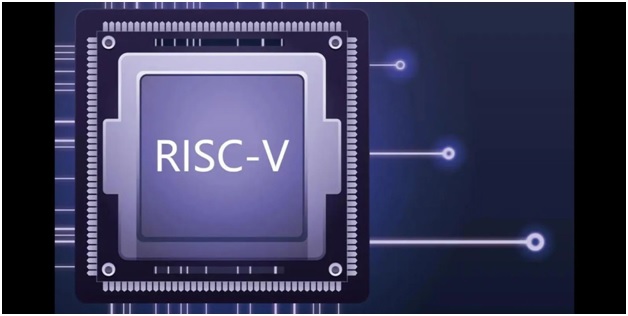
- 18 Oct 2023
Why in the News?
Chip designer Qualcomm said on Tuesday it is partnering with Alphabet's Google to make wearable devices like smartwatches using chips based on RISC-V technology.
What is RISC-V Technology?
- RISC-V technology, colloquially pronounced as "risk five," stands as a pioneering open-source initiative in computer architecture.
- Functioning as an open-source Instruction Set Architecture (ISA), it serves as the foundation for crafting customized processors tailored to various end applications.
- Positioned as the fifth generation of processors rooted in the Reduced Instruction Set Computer (RISC) philosophy, RISC-V originated as a project at UC Berkeley.
- Initially conceived for academic purposes, it has since matured into a robust standard now overseen by RISC-V International.
- RISC-V operates as an open-standard architecture, with its definition shaped collaboratively by member companies associated with RISC-V International—a global nonprofit organization steering the ISA.
- This collaborative approach fosters innovation and design freedom among member companies, paving the way for groundbreaking advancements in processor technology.
- At its core, RISC-V features a concise set of instructions upon which all software designs run.
- This streamlined architecture empowers designers to tailor and construct processors in alignment with the specific requirements of their intended applications.
Key Advantages:
- The merits of RISC-V extend beyond its technical specifications. Its open-standard nature facilitates industry-wide collaboration and innovation, enabling diverse stakeholders to contribute to the evolution of processor technology.
- Moreover, the entire RISC-V architecture is subject to scrutiny in the public domain, mitigating concerns related to back doors and concealed channels.
Applications:
- RISC-V finds application across a broad spectrum of industries, including wearables, industrial processes, Internet of Things (IoT), home appliances, smartphones, automotive systems, high-performance computing (HPC), and data centres.
- Its versatility makes it a compelling choice for diverse technological landscapes, showcasing its adaptability and efficacy across various domains.
Life through geometry in Warli (The Hindu)
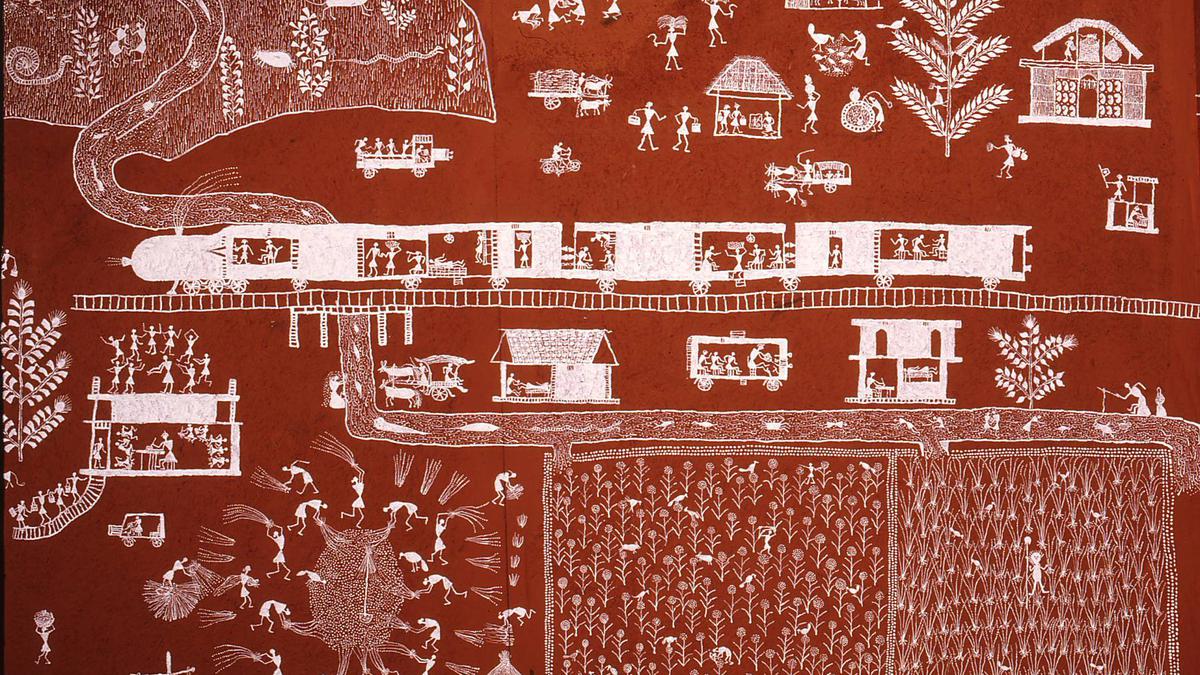
- 29 Dec 2023
Why is it in the News?
Warli Whisperers, an exhibition by the Inherited Arts Forum, traces the artistic journey of the celebrated Mashe family from Maharashtra.
About the Warli Art:
- Origin: Warli art is a tribal form originating from the North Sahyadri region of Maharashtra, with roots dating back to the 10th century AD.
- However, it gained recognition for its unique style in the early 1970s.
- Practitioners: Traditionally, Warli art was practiced by Suvasinis, the women of the Warli tribe, who adorned the Lagn Chowk or wedding square with their artistic expressions.
- Characteristics: Warli artists draw inspiration from nature, depicting scenes of farming, food gathering, village life, and elements from the natural world.
- These paintings are mainly dominated by basic geometric shapes like circles, triangles and squares.
- These geometric shapes stand as a symbol of natural elements in our environment.
- For example, the circles represent the sun and moon, the triangles represent the mountains and the squares are considered as the central motifs of the painting.
- Techniques and Materials: The paintings showcase triangles, circles, and lines in stark white against a mud brown background, narrating stories of village life, customs, and traditions.
- Modified bamboo sticks serve as paintbrushes, and the colours are derived from nature, such as brown and orange from henna, indigo from dye, red from bricks, and white from thick rice paste.
- Warli art serves as a vibrant portrayal of the everyday and social occurrences within the Warli tribe of Maharashtra, serving as a means to adorn the walls of village houses.
- Concerns: It was not recognised as an art form even though it was in practice for centuries.
Warli Tribe
- The Warli tribe, categorized as indigenous Adivasis, inhabit both the mountainous and coastal regions near the Maharashtra-Gujarat border.
- Their communication is conducted through an unwritten Varli language, classified within the southern zone of Indo-Aryan languages.
SC Collegium recommends names for Chief Justices of five High Courts (The Hindu)
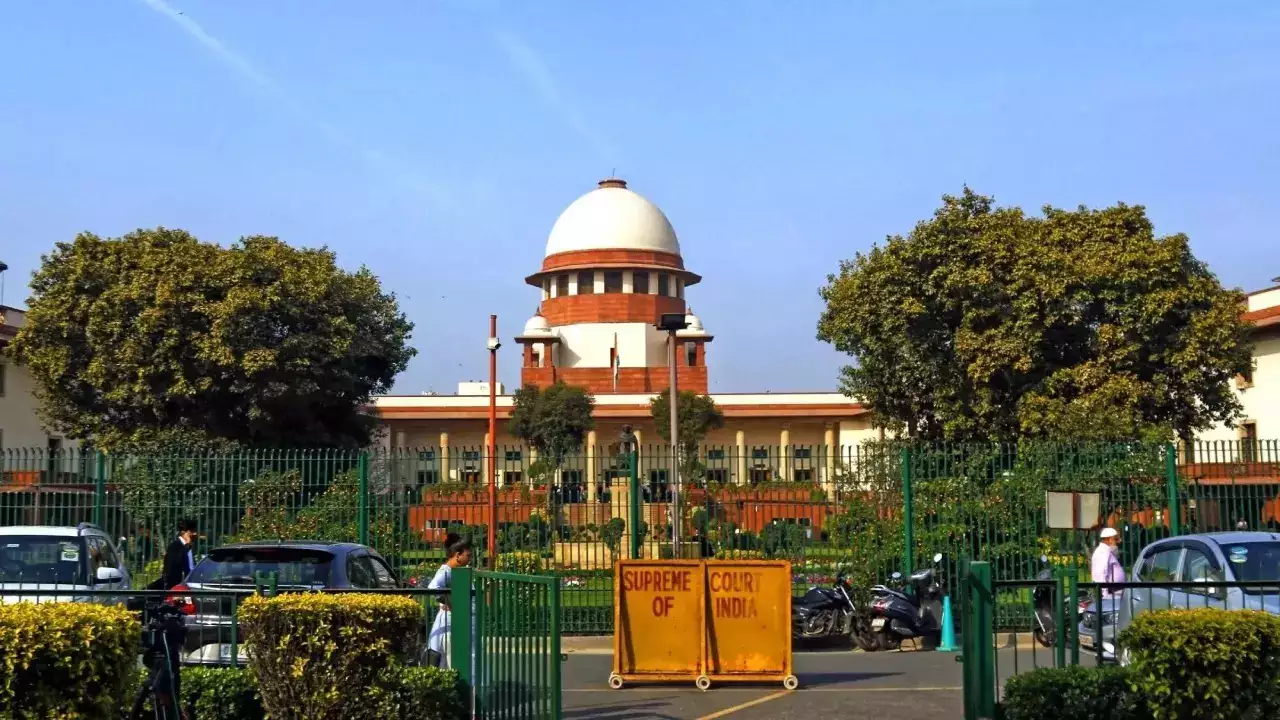
- 29 Dec 2023
Why is it in the News?
The Supreme Court Collegium headed by Chief Justice of India D.Y. Chandrachud has recommended the appointment of Chief Justices to five High Courts.
What is the Collegium System?
- It is a system under which appointments and transfers of judges are done in the Supreme Court and High Courts.
- It is not rooted in the Constitution, iInstead, it has evolved through judgments of the Supreme Court.
- The Supreme Court Collegium, headed by the Chief Justice of India, consists of the court's four other most senior judges.
- Similarly, the High Court Collegium is chaired by its Chief Justice, along with the four other most senior judges of that specific high court.
Appointment of Judges: Constitutional Framework
- Constitutional Provision: Under Article 217, the President holds the authority to appoint judges of a high court.
- The appointment of the Chief Justice involves consultation with the Chief Justice of India and the respective state's governor.
- Similarly, consultation with the Chief Justice of the concerned high court is essential for appointing other judges.
- In cases where a high court serves multiple states, the President consults with the governors of all relevant states.
- No Minimum Age Requirement: The Constitution does not specify a minimum age for the appointment of high court judges.
- Qualifications of Judges: To qualify for a high court judge, an individual must:
- Be a citizen of India.
- Have held a judicial office within India's territory for ten years; or
- Have been an advocate of a high court (or successive high courts) for ten years.
Supreme Court Judgements:
- Second Judges Case (1993): The Supreme Court decreed that the appointment of a high court judge must align with the Chief Justice of India's opinion.
- Third Judges Case (1998): The Supreme Court emphasized that for the appointment of high court judges, the Chief Justice of India should consult a collegium comprising the two most senior judges of the Supreme Court.
- The consultation process involves more than the Chief Justice of India's individual opinion.
Is Pegasus spyware targeting journalists in India? (The Hindu)

- 29 Dec 2023
Why is it in the News?
Amnesty International and Washington Post recently announced that it has found the presence of Pegasus spyware, sold only to governments, on two Indian journalists’ phones.
What is Pegasus Spyware, and How Does it Infiltrate Devices?
- Pegasus is a sophisticated form of malware, covertly designed to gather information without the user's knowledge.
- Developer: Developed by the Israeli security firm NSO Group.
- Objectives: Pegasus serves three primary purposes:
- Collecting historical data on a device discreetly.
- Continuously monitoring user activities and gathering personal information.
- Transmitting the collected data to third parties.
Infiltration Mechanisms:
- Pegasus utilizes "zero-click exploits," exploiting vulnerabilities in popular apps like iMessage and WhatsApp.
- Notably, zero-click exploits require no user interaction, differentiating them from typical cyberattacks.
- Network injection attacks are another method employed by Pegasus, where unsecured websites are used to infiltrate devices within milliseconds of the user's visit.
What is a Zero-click exploit?
- A zero-click exploit involves the installation of malicious software on a device without the device owner's consent.
- Notably, it does not require any action from the device owner to initiate or complete the installation.
Specific Exploit in the Recent Case with Indian Journalists:
- The particular exploit reportedly used in the incidents is known as BLASTPAST (previously identified as BLASTPASS), unfolding in two phases.
- Initial Phase: The attack aims to establish a connection with Apple HomeKit, a platform enabling users to control various smart devices on their network.
- The primary objective of this phase might be to assess how the device could be vulnerable to exploitation or to maintain visibility for potential future attacks.
- Second Phase: Malicious content is sent through the iMessage app to the target device.
- This stage is pivotal as it delivers the complete spyware payload, enabling extensive surveillance and data collection.
Mines Ministry unveils draft rules for offshore minerals auction (The Hindu Business Line)
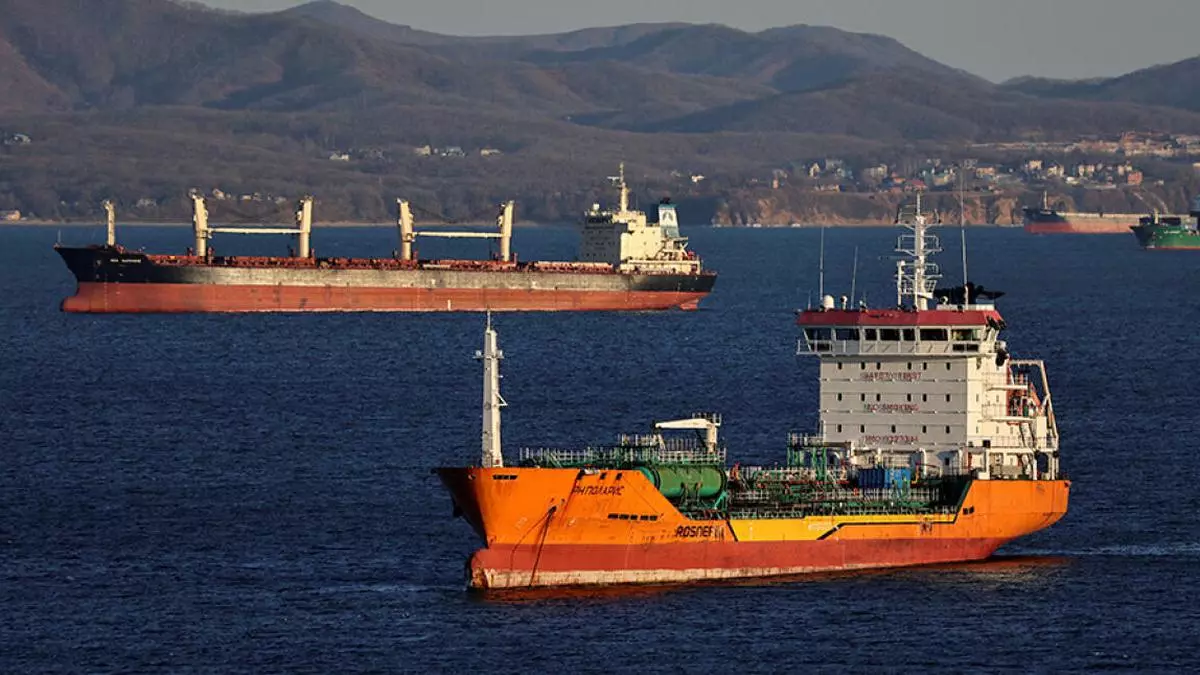
- 29 Dec 2023
Why is it in the News?
India’s Mines Ministry has proposed a new set of rules for the auction of offshore mineral blocks. It is also in the process of identifying such mineral blocks, including those in exclusive economic zones beyond territorial waters.
Context:
- To implement the amended Offshore Areas Mineral (Development & Regulation) Act, 2002 (OAMDR Act), the ministry has unveiled two draft rules:
- Offshore Areas Mineral Auction Rules: These rules delineate provisions governing the auctioning of production leases.
- Offshore Areas Existence of Mineral Resources Rules: These rules set forth norms for the exploration of minerals and deposits in offshore areas.
Offshore Areas Mineral (Development & Regulation) Act, 2002 (OAMDR Act):
- The OAMDR Act governs the development and regulation of mineral resources in India's territorial waters, continental shelf, exclusive economic zones, and other maritime zones.
About Offshore Areas Minerals (Development and Regulation) Amendment Bill, 2023:
- The Bill proposes amendments to the Offshore Areas Mineral (Development and Regulation) Act, 2002, governing mining activities in India's maritime zones.
Key highlights include:
- Empowering the government to reserve offshore areas without operating rights.
- Granting the administering authority the discretion to issue composite licenses or production leases to the government or a government company.
- Eliminating the provision for renewing production leases and setting a fixed fifty-year period, aligning with the Mines and Minerals (Development and Regulation) Act, 1957.
- Mandating the grant of production leases to the private sector through competitive bidding.
- Allowing non-competitive bidding for operating rights in mineral-bearing areas reserved by the central government for government entities or corporations.
- Restricting the grant of exploration licenses or production leases for atomic minerals to government or government corporations.
- Introducing a four-year timeline for the commencement of production and dispatch after executing a composite license or production lease, with a two-year timeline (extendable by one year) for re-commencement after discontinuation.
- Authorizing the central government to establish rules for mineral conservation, systematic development, and environmental protection in offshore areas, preventing or controlling pollution from exploration or production operations.
India's Maritime Zone Mineral Resources:
- India's maritime zone hosts diverse mineral resources, including lime mud off the Gujarat and Maharashtra coasts within the Exclusive Economic Zone (EEZ).
- Additionally, the region boasts construction-grade sand along the Kerala coast and heavy mineral placers in the inner-shelf and mid-shelf regions off Odisha, Andhra Pradesh, Kerala, Tamil Nadu, and Maharashtra.
- Phosphorite is found in the Eastern and Western continental margins, while the Andaman Sea and Lakshadweep Sea house Polymetallic Ferromanganese (Fe-Mn) nodules and crusts.
Govt issues PMLA notice to Binance, 8 other offshore crypto firms, asks IT Min to block URLs (Indian Express)
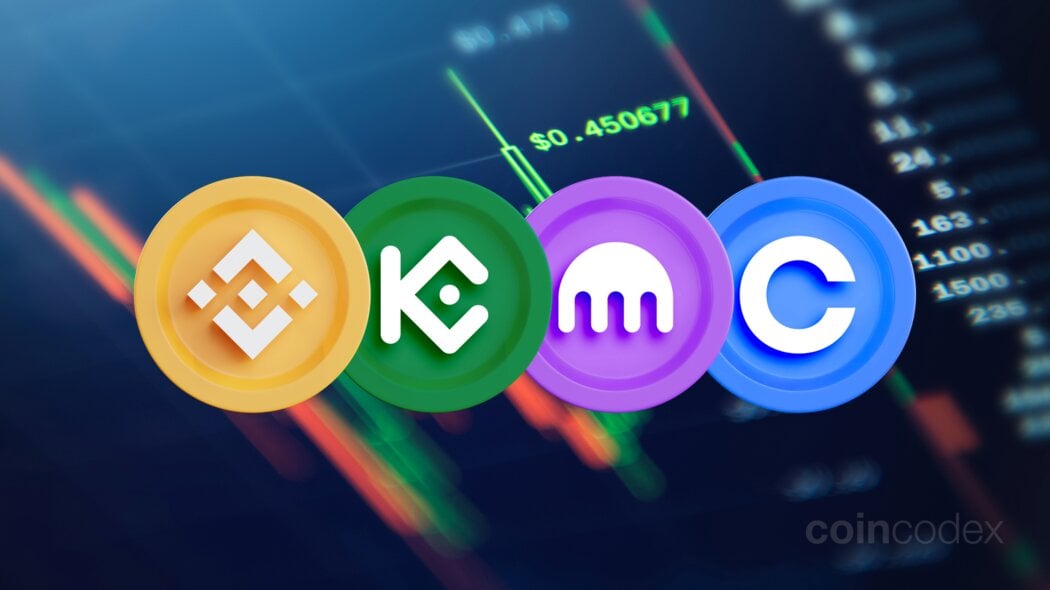
- 29 Dec 2023
Why is it in the News?
India's Financial Intelligence Unit has issued show cause notices to nine offshore crypto-currency operators, including Binance, for not complying with the anti-money laundering PML Act.
About the Financial Intelligence Unit India:
- Financial Intelligence Unit – India (FIU-IND) was set by the Government of India in November 2004 as the central national agency responsible for receiving, processing, analyzing and disseminating information relating to suspect financial transactions.
- FIU-IND is also responsible for coordinating and strengthening efforts of national and international intelligence, investigation and enforcement agencies in pursuing the global efforts against money laundering and financing of terrorism.
- It is an independent body reporting directly to the Economic Intelligence Council (EIC) headed by the Finance Minister.
Key Functions of FIU-IND:
- Information Collection: Act as the central hub for receiving various reports, including Cash Transaction Reports (CTRs), Non-Profit Organisation Transaction Reports (NTRs), Cross Border Wire Transfer Reports (CBWTRs), Reports on the Purchase or Sale of Immovable Property (IPRs), and Suspicious Transaction Reports (STRs) from diverse reporting entities.
- Information Analysis: Analyze the received information to unveil transaction patterns indicative of potential money laundering and associated criminal activities.
- Information Sharing: Collaborate by sharing intelligence with national intelligence/law enforcement agencies, national regulatory authorities, and foreign Financial Intelligence Units, fostering a collective effort against financial crimes.
- Central Repository: Establish and maintain a national database by consolidating reports received from reporting entities.
- Coordination: Strengthen the collection and sharing of financial intelligence through efficient national, regional, and global networks to combat money laundering and related crimes.
- Research and Analysis: Conduct ongoing monitoring and identification of strategic areas related to money laundering trends, typologies, and developments.
What are Virtual Digital Assets?
- As per the Income Tax Act, a 'virtual digital asset' is described as any information, code, number, or token (excluding Indian currency or foreign currency) generated through cryptographic means and blockchain technologies.
- These assets can be electronically transferred, stored, or traded.
- The definition explicitly covers non-fungible tokens (NFTs) or tokens of a similar nature, regardless of nomenclature.
Forest Department Relies on Muthuvan Tribe's Indigenous Knowledge for Nilgiri Tahr Conservation (The Hindu)
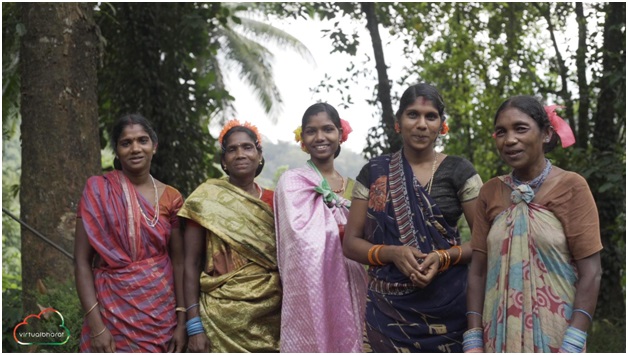
- 17 Oct 2023
Why in the News?
Members of the Muthuvan tribe of the Anamalai hills, who are known for coexisting with the wildlife with their traditional knowledge, have joined hands with the Tamil Nadu Forest Department for a unique task.
About the Muthuvan Tribe:
- Inhabiting the border hill forests of Kerala and Tamil Nadu, the Muthuvan tribe is distributed across this region.
- The tribe communicates in distinct dialects, identifying themselves as Malayalam Muthuvan and Pandi Muthuvan.
- Cultural Beliefs: Embracing animism and spirit worship, the Muthuvan tribe venerates forest gods and attributes the spirits of their ancestors as the initial settlers in the hill forests.
- Renowned for their harmonious coexistence with wildlife, the Muthuvan people leverage traditional knowledge to navigate their relationship with the natural environment.
- Unique Governance System - 'Kani System': Operating under the 'Kani System,' each village is overseen by a 'Kani' responsible for village administration, reflecting their distinctive form of governance.
- Traditional Medicine Expertise: Proficient in traditional medicines, the Muthuvan tribe safeguards their effective remedies, preserving and passing down this knowledge across generations.
- Occupation: Agriculture serves as the primary occupation for Muthuvan tribes, yielding various products such as ragi, cardamom, and lemongrass.
About Project Tahr:
- Project Tahr aims to enhance comprehension of the Nilgiri Tahr population through surveys and radio telemetry studies.
- The initiative focuses on reintroducing Tahrs to their historical habitat, fostering their return to natural landscapes.
- Addressing immediate threats, the project employs strategic measures to mitigate challenges facing the Nilgiri Tahr.
- A key component involves intensifying public awareness efforts to garner support and understanding for the conservation of this species.
- Project Tahr is slated for a comprehensive 5-year implementation, spanning from 2022 to 2027.
INS Sumedha Visits Nigeria as part of its deployment to the Gulf of Guinea (PIB)
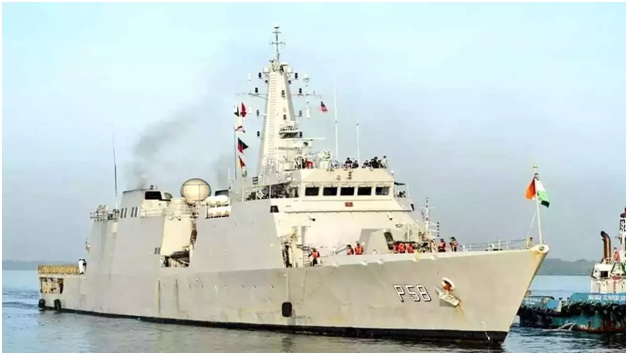
- 17 Oct 2023
Why in the News?
Indian Naval Ship INS Sumedha recently made a port visit at Lagos, Nigeria as part of its deployment to the Gulf of Guinea (GoG).
About INS Sumedha:
- INS Sumedha is the third vessel among the indigenously crafted Saryu-class Naval Offshore Patrol Vessels (NOPV).
- Constructed and designed domestically, Goa Shipyard Limited played a pivotal role in the indigenous creation of INS Sumedha.
- The vessel officially joined the Indian Navy's fleet on March 7, 2014.
- Operational Base: A key asset of the Indian Navy's Eastern Fleet, INS Sumedha operates from its base in Visakhapatnam.
- Primary Functions: The vessel is tasked with a diverse range of functions, including EEZ surveillance, anti-piracy patrols, fleet support operations, maritime security provision to offshore assets, and execution of escort operations for high-value assets.
- Features:
- With a displacement of 2,230 tonnes, INS Sumedha boasts dimensions of 105 meters in length and 12.9 meters in beam.
- Equipped with a cutting-edge weapon and sensor package, the vessel ensures enhanced operational capabilities.
- Designed to carry an Advanced Light Combat Helicopter onboard, adding to its versatility in maritime operations.
- Powered by two of the largest diesel engines deployed in the Indian Navy, INS Sumedha attains a top speed of 25 knots.
- Featuring a remarkable range of 6,000 nautical miles (11,000 km) at 16 knots (30 km/h), the offshore patrol vessel is well-suited for prolonged missions and operations.
About the Gulf of Guinea:
- Location: Situated as the northeasternmost part of the tropical Atlantic Ocean, the Gulf of Guinea is positioned off the western coast of the African continent.
- The Gulf lies at the confluence of the Prime Meridian and the Equator, specifically at 0°0’N and 0°0'E.
- Extent and Coastline: Encompassing an area of 2.3 million square kilometres, the Gulf features an extensive coastline stretching approximately 6,000 kilometres.
- Characterized by a narrow continental shelf, it boasts a distinctive coastal landscape.
- Oceanic Conditions: The Gulf of Guinea experiences warm tropical waters characterized by relatively low salinity, influenced by the inflow of rivers and high regional rainfall.
- Notable tributaries include the Volta and Niger rivers.
- Coastal Countries: 16 countries border the Gulf of Guinea, including Angola, Benin, Cameroon, Cote d'Ivoire, Democratic Republic of Congo, Republic of Congo, Guinea, Equatorial Guinea, Guinea-Bissau, Gabon, Nigeria, Ghana, São Tomé and Principe, Togo, and Sierra Leone.
- Topography: The coastal region is predominantly low-lying, featuring mangrove swamps, marshes, and lagoons.
- Geological Significance: The Gulf's coastline bears a striking resemblance to the continental margin of South America, affirming the theory of continental drift.
- Holding over 35% of the world’s petroleum reserves, the Gulf of Guinea is a significant global repository of petroleum.
- Security Challenges: Regrettably, the Gulf of Guinea has gained notoriety as one of the world’s most perilous gulfs due to widespread piracy, significantly impacting West African countries and attracting international concern.
BCCC Cautions Entertainment Channels on Depicting SCs, STs. (Business Standard)
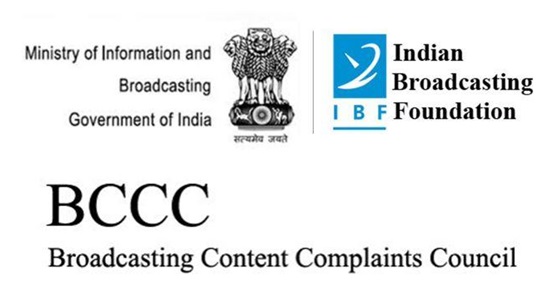
- 17 Oct 2023
Why in the News?
The Broadcasting Content Complaint Council (BCCC) on Tuesday asked entertainment channels to exercise "extreme caution" while portraying the scheduled castes and scheduled tribes in television programmes to avoid hurting the sentiments of the members of the two communities.
About the Broadcasting Content Complaints Council (BCCC):
- The Indian Broadcasting and Digital Foundation (IBDF) established the BCCC in June 2011 as an independent self-regulatory body.
- Regulatory Role: The primary function of the BCCC is to enforce self-regulatory guidelines for non-news channels, covering general entertainment, kids, and special interest channels.
- Formulation of Guidelines: Guidelines address crucial areas, including national interest, racial and religious harmony, treatment of children, social values, explicit content (sex and nudity), violence, crime, gambling, drugs, smoking, tobacco, alcohol, defamation, harm, and offence.
- Complaint Lodging Process: Any viewer can file a complaint regarding television programs, non-news channels, and digital content of IBDF India members.
- Composition of BCCC:
- The council comprises 13 members, including a chairperson, four non-broadcast members, four representatives from national-level statutory commissions, and four members from the broadcast industry.
- Functioning Mechanism: Upon receiving a valid complaint, the concerned channel is required to present its viewpoint on the contested content within one working week.
- If the BCCC committee finds the channel's response unsatisfactory, it holds the authority to issue directives, mandating modifications or withdrawal of the content.
- Reporting to Authorities: In case of non-compliance with directives, the BCCC promptly submits a detailed report to the Ministry of Information and Broadcasting within 24 hours.
Key Details about the Indian Broadcasting & Digital Foundation (IBDF):
- Founded in 1999, the Indian Broadcasting Foundation initially served as the apex body for broadcasters.
- Recently rebranded as the Indian Broadcasting and Digital Foundation (IBDF) to encompass digital platforms, consolidating oversight over all digital over-the-top streaming firms.
- Representative Role: Recognized as the official spokesperson for the Indian broadcasting industry, IBDF plays a crucial role in articulating industry perspectives.
- IBDF's membership includes a diverse range of channels, covering both news and non-news categories such as General Entertainment Channels (GEC), sports, music, movies, and infotainment.
- Actively involved in providing research-based legislative inputs to the government, IBDF engages in advocacy efforts on various fronts, including fiscal, regulatory, and business issues.
- The organization plays a pivotal role in facilitating the formulation of favourable policies, addressing industry challenges, and advocating for essential changes in the overall system.
New Plant Species Curcuma kakchingense Discovered in Manipur (HT)
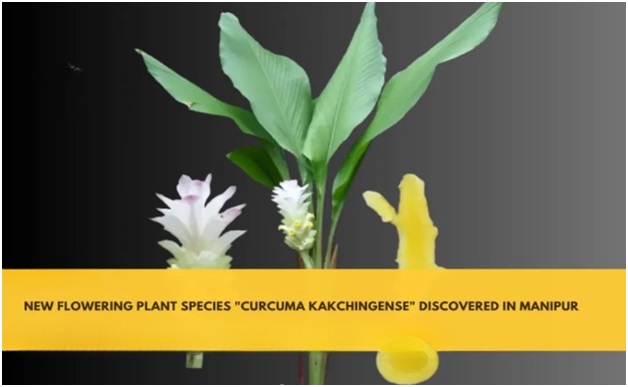
- 17 Oct 2023
Why in the News?
In a remarkable botanical discovery, a team of researchers from the Department of Life Sciences at Manipur University and Kwaklei and Khonggunmelei Orchids Pvt. Ltd. has unveiled a hitherto unknown plant species named "Curcuma kakchingense."
About Curcuma Kakchingense:
- Recently identified flowering plant species in Manipur, belong to the Zingiberaceae family.
- Member of the angiospermic family Zingiberaceae, which includes well-known plants like turmeric, gingers, and cardamom.
- Plant Characteristics: Robust plant reaching a height of eight feet, characterized by large terminal inflorescence.
- Natural Habitat: Thrives along the banks of the Sekmai River in the Kakching District of Manipur.
- Resemblance to Other Species: Bears a striking resemblance to local "Yaingung" (Curcuma longa) and Curcuma phrayawan from Thailand.
- Distinguished by lemon-yellow rhizomes with a notably bitter taste.
- IUCN Red List Classification: Classified as "Data Deficient" (DD) under the IUCN Red List category.
Importance of Curcuma Plants:
- Culinary and Traditional Uses: Various Curcuma species, including turmeric (Curcuma longa), play a vital role in cuisines, traditional medicines, spices, and dyes.
- Biological Activities: Curcumin and curcuminoids found in Curcuma species are nontoxic polyphenolic compounds with diverse biological activities.
- Pharmacological Properties: Essential oil of Curcuma species possesses pharmacological properties, including anti-inflammatory, anti-cancerous, anti-diabetic, and anti-microbial effects.
- Versatile Applications: Widely utilized in cosmetics, perfumes, and as ornamental plants, contributing to various industries and daily life.
New Artificial Intelligence System BTSbot Discovers Supernova (India Today)
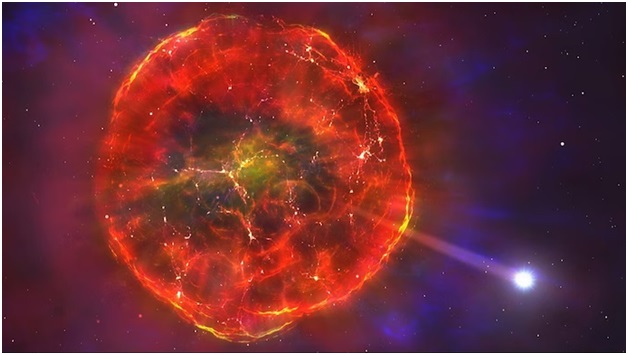
- 17 Oct 2023
Why in the News?
An international team led by Northwestern University has successfully created an artificial intelligence (AI) tool Bright Transient Survey Bot (BTSbot) that can detect, identify, and classify supernovae.
What is the Bright Transient Survey Bot (BTSbot)?
- The Bright Transient Survey Bot operates as a machine-learning algorithm, undergoing training with a vast dataset comprising over 1.4 million images from nearly 16,000 sources.
- Utilizing data from the Zwicky Transient Facility (ZTF), it successfully identified the recently discovered supernova named SN2023tyk.
- Functionality: The algorithm seamlessly automates the process of seeking potential supernovae across the night sky.
- In the case of SN2023tyk, it autonomously requested the supernova's spectrum from the Palomar Observatory.
- Subsequently, the Spectral Energy Distribution Machine (SEDM), another robotic telescope, performed comprehensive observations to obtain the source's spectrum.
- Advantages: This innovative system not only streamlines the entire workflow of searching, detecting, confirming, classifying, and announcing new supernovae but also eradicates human error, significantly enhancing the speed of the process.
- The Bright Transient Survey Bot showcases the potential of automated technology in advancing astronomical discoveries.
What is artificial intelligence?
- Artificial Intelligence (AI) refers to the interdisciplinary field of computer science dedicated to developing algorithms and computational models that emulate human cognitive processes.
- Rooted in machine learning and advanced data analytics, AI aims to create systems capable of reasoning, problem-solving, and decision-making.
- AI involves the study and design of intelligent agents, encompassing areas like natural language processing, computer vision, and expert systems.
- It seeks to enhance machines' ability to learn from experience, adapt to new information, and perform tasks that traditionally necessitate human intelligence, fostering innovation across diverse domains, including healthcare, finance, and robotics.
Chennai's Pallikaranai Wetlands Welcoming Migratory Bird Flocks (The Hindu)
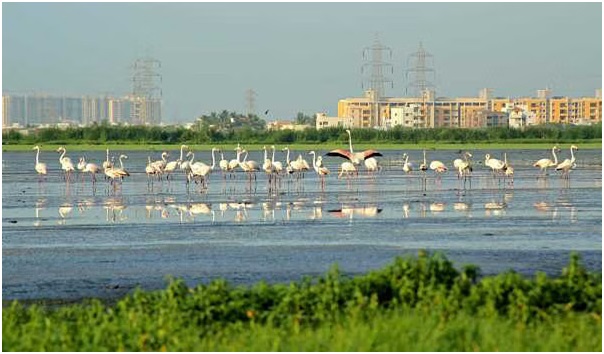
- 16 Oct 2023
Why in the News?
With over 150 garganeys, and several other species, including waders and raptors, flocking the Pallikaranai marshland, the curtain for the migratory season has been raised.
About Pallikaranai Marshland:
- Location: Pallikaranai marshland is a freshwater and partly saline wetland, located approximately 20 kilometres south of Chennai, Tamil Nadu.
- The eastern border of the marsh is flanked by the Buckingham Canal.
- Rich Ecosystem: The diverse ecosystem of Pallikaranai supports an impressive array of wildlife, including 115 bird species, 10 mammals, 21 reptiles, 10 amphibians, 46 fish, nine molluscs, five crustaceans, and seven butterfly species.
- Notable Species: Among the diverse wildlife are noteworthy species such as the Russell’s viper (Daboia siamensis), glossy ibis (Plegadis falcinellus), grey-headed lapwings (Vanellus cinereus), and Pheasant-tailed jacana (Hydrophasianus chirurgus).
- Biodiversity Significance: Beyond its biodiversity, the marshland serves a crucial role in flood prevention for Chennai, absorbing water during wet periods and releasing it during dry spells.
- Environmental Threats: Despite its ecological importance, the site faces threats from invasive non-native species, household sewage, urban wastewater, and periodic droughts.
- Ramsar Designation: Acknowledging its ecological significance, Pallikaranai marshland holds the status of being one of India's Ramsar sites, recognized for its importance in wetland conservation on an international scale.
INS Beas to Be Upgraded (PIB)
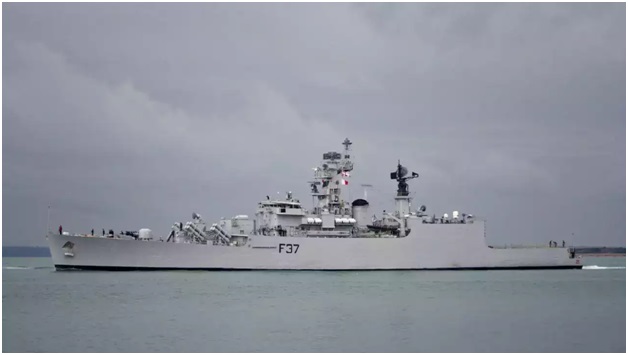
- 16 Oct 2023
Why in the News?
The Ministry of Defence signed a contract on October 16, 2023, in New Delhi for the life Upgrade and Re-Powering of "INS Beas" with Kochi-based M/S Cochin Shipyard Limited (CSL) at an overall cost of Rs. 313.42 Cr.
Context:
- The INS Beas is gaining attention as the first Brahmaputra Class Frigate to undergo a transition from steam to diesel propulsion.
- The completion of its Mid-Life Upgrade and Re-Powering in 2026 is expected to result in the INS Beas joining the active fleet of the Indian Navy, equipped with a modernized weapon suite and upgraded combat capabilities.
About INS Beas:
- INS Beas (F37) stands as a Brahmaputra-class frigate within the Indian Navy, constructed at the Garden Reach Shipbuilders and Engineers (GRSE) in Kolkata.
- Commissioned on July 11, 2005, it is the second ship in the Indian Navy to carry this name, with the first being a Leopard-class frigate commissioned in 1960 and decommissioned in 1992.
- Role: Functioning as a versatile warship, INS Beas is proficient in various missions, encompassing anti-aircraft, anti-submarine, and anti-ship warfare.
- Additionally, it plays a crucial role in patrolling, surveillance, and safeguarding India's maritime interests.
- Features: The ship's design and construction are wholly Indian, derived from the modification of the Godavari-class frigate.
- With a displacement of about 3,850 tonnes, INS Beas boasts a length of 126 meters (413 feet) and a beam width of 14.5 meters (48 feet).
- Propulsion: Powered by 2 steam turbines, INS Beas demonstrates remarkable agility, capable of reaching speeds exceeding 30 knots during naval operations.
- Technology: Equipped with modern sensor suites and matching weapon systems, the ship embodies cutting-edge technology to enhance its operational capabilities.
Amazon River Hits Lowest Levels in a Century Amid Drought in Brazil (Business Standard)
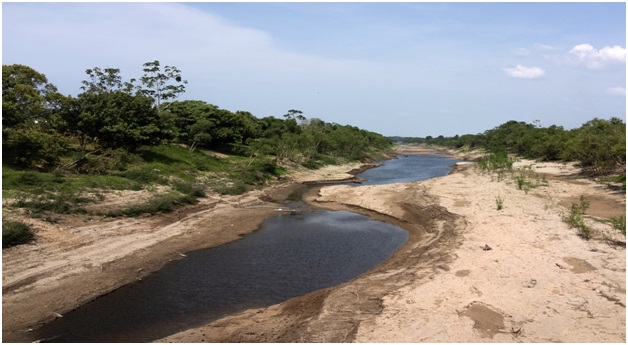
- 16 Oct 2023
Why in the News?
The Amazon River fell to its lowest level in over a century on Monday at the heart of the Brazilian rainforest as a record drought upended the lives of hundreds of thousands of people and damaged the jungle ecosystem.
About the Amazon River:
- The Amazon River holds the distinction of being the world's largest river in terms of both water volume and width.
- Length and Course: Spanning an impressive 6,400 kilometres, it is the second-longest river globally, surpassed only by the Nile.
- Originating high in the Andes Mountains, the river courses its way eastward through vast rainforests and lowlands before reaching its culmination at the northeastern coast of Brazil, where it empties into the Atlantic Ocean.
- Dynamic Width: During the dry season, the Amazon River exhibits a width ranging from 4 to 5 kilometres, expanding significantly to 50 kilometres in certain areas during the wet season.
- Unparalleled Drainage Area: The Amazon boasts the largest drainage area globally, with its watershed spanning across Brazil, Peru, Ecuador, Colombia, Venezuela, and Bolivia.
- Approximately two-thirds of the Amazon's mainstream and the majority of its basin lie within the borders of Brazil.
- Water Discharge and Global Impact: With a staggering water discharge of 300,000 cubic meters per second into the Atlantic Ocean, the Amazon contributes one-fifth of the total freshwater volume entering the world's oceans.
- This immense water flow plays a pivotal role in regulating global oxygen and carbon cycles.
- Extensive Tributaries: Featuring over 1,100 tributaries, including seventeen exceeding 1,500 kilometres in length, notable contributors include the Rio Negro, the Madeira River, and the Xingu River.
- Environmental Significance: The Amazon Rainforest, constituting approximately half of the Earth's remaining rainforest, stands as the largest repository of biological resources.
- Often referred to as the "lungs of the Earth," the Amazon plays a crucial role in maintaining the planet's oxygen and carbon balance.
US Says Egypt Border Crossing to Gaza to Reopen (Business Today)
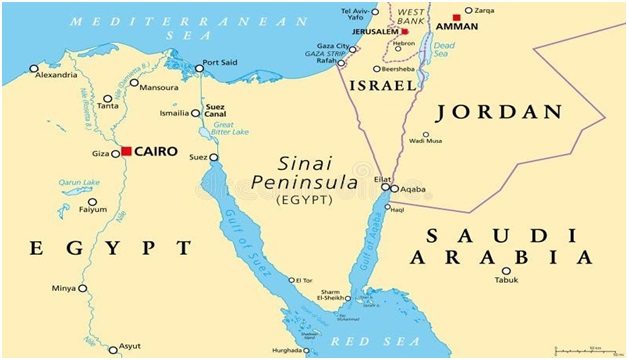
- 16 Oct 2023
Why in the News?
Hundreds of tons of aid from multiple countries have been stationed in Egypt's Sinai Peninsula, awaiting an agreement for secure transportation to Gaza for several days.
About the Sinai Peninsula:
- Geographical Location: The Sinai Peninsula is a triangular landmass located in northeastern Egypt, serving as a critical land bridge that connects the continents of Asia and Africa.
- Size and Sovereignty: Encompassing an expansive area of 23,500 square miles (61,000 square km), the Sinai Peninsula is recognized as a sovereign territory within the boundaries of Egypt.
- Geographical Boundaries: It is bordered to the north by the Mediterranean Sea and to the east by Israel and the Gaza Strip.
- The Suez Canal lies to the west, acting as a separation from the African part of Egypt.
- To the southwest, the Gulf of Suez and the Red Sea border the peninsula, while the Gulf of Aqaba marks its southeastern boundary.
- Egypt shares maritime borders in the Sinai with Jordan and Saudi Arabia.
- Historical Significance: In the late 19th century, including the Sinai Peninsula, Egypt became part of the British Empire until gaining independence in 1922.
- During the Six-Day War of June 1967, the peninsula was occupied by Israeli forces and returned to Egypt in 1982 as part of the peace treaty signed in 1979.
- Diverse Geography: The Sinai Peninsula is characterized by a diverse landscape, featuring mountain ranges, deserts, plateaus, and coastal regions.
- Population Composition: With a relatively sparse population, the Sinai is home to about 600,000 people, predominantly consisting of Arab Egyptians and Bedouins.
Hailstorms Damage Apple Orchards in Kulgam, Shopian (HT)
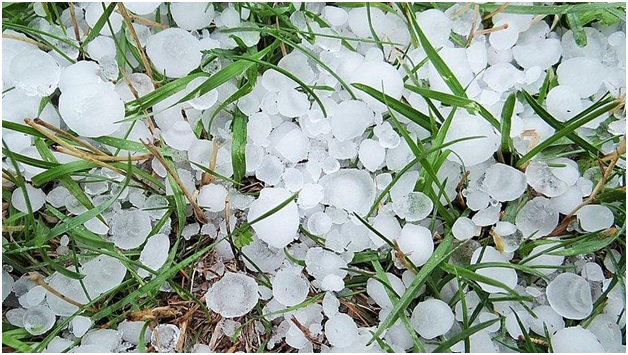
- 16 Oct 2023
Why in the News?
A hailstorm in the evening caused massive damage to the crops and fruits in south Kashmir’s Kulgam and Shopian districts. Residents said the hailstorm damaged the apple fruit which was ready for harvesting.
What are Hailstorms?
- Hail, a solid form of rain composed of ice balls or lumps, leads to the formation of hailstorms when they descend to the ground.
- Typically lasting around 15 minutes, these storms can inflict injuries and damage to structures, vehicles, and more, particularly prevalent in midlatitude regions.
- Hailstorms occasionally coincide with other severe weather phenomena such as cyclones and tornadoes.
- The size of hailstones varies widely, ranging from small pellets under 1/4 inch to larger stones measuring several inches in diameter.
- Conditions: Conditions conducive to hailstorm occurrence involve the presence of highly developed Cumulonimbus clouds, massive anvil-shaped formations observed during thunderstorms that can reach heights of up to 65,000 feet.
- Strong updrafts, or ascending air currents within these clouds, and high concentrations of supercooled liquid water are essential elements.
- Formation of Hail: Hail formation begins with a water droplet lifted by an updraft inside a thundercloud.
- As it ascends, supercooled water droplets adhere to its surface, creating layers of ice.
- With continued ascent, the hail embryo grows by accumulating more supercooled particles until gravity pulls it down.
- Large hailstones often display alternating layers of clear and opaque ice due to irregular rates of freezing during their development.
Vice President Interacted With Inter-Parliamentary Union (IPU) President During P20 Summit (PTI)
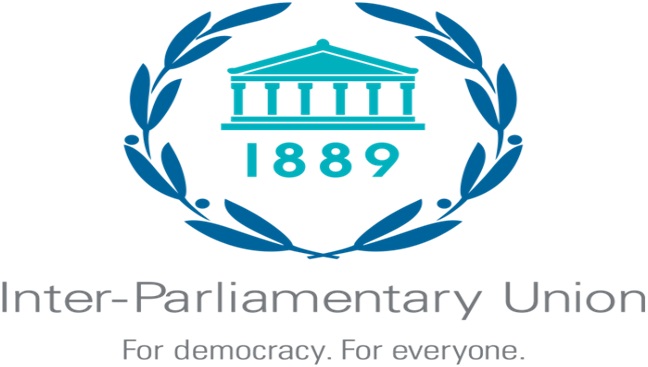
- 14 Oct 2023
Why in the News?
Vice President Jagdeep Dhankhar recently hosted a lunch for heads of parliamentary delegations attending the G20 Parliamentary Speakers' Summit (P20) and also interacted with Inter-Parliamentary Union (IPU) President Duarte Pacheco.
About the Inter-Parliamentary Union (IPU):
- Established in 1889 in Paris, the Inter-Parliamentary Union (IPU) is the international organization of Parliaments, dedicated to promoting representative democracy and world peace.
- It serves as the first multilateral political organization globally, fostering cooperation and dialogue among all nations.
- Mission and Slogan: The IPU's mission revolves around parliamentary diplomacy, empowering parliaments, and parliamentarians to advance peace, democracy, and sustainable development worldwide.
- Its slogan, "For democracy. For everyone," encapsulates its commitment to democratic values.
- Membership and Promotion of Democracy: Currently comprising 179 member parliaments and 13 associate members, the IPU actively promotes democracy by strengthening parliaments, and fostering youth inclusion, gender balance, and diversity.
- A dedicated committee defends the human rights of parliamentarians globally.
- Headquarters and Funding: The IPU relocated its headquarters to Geneva in 1921.
- Financed primarily by its members using public funds, the organization sustains its operations and initiatives.
Organizational Structure:
- IPU Assembly: Principal statutory body expressing IPU views on political issues.
- Gathers parliamentarians to study international problems and make actionable recommendations.
- Governing Council: Plenary policymaking body composed of three representatives from each member parliament.
- Establishes the IPU's annual program, and budget, and considers substantive issues.
- Executive Committees: A 17-member body overseeing IPU administration and advising the Governing Council.
- Fifteen members elected by the Council for a four-year term.
- Standing Committees: Three committees set up by the Governing Council to assist the Assembly in its work.
- Meeting of Women Parliamentarians: A separate organ meeting during the first round of Statutory Meetings, reporting to the Governing Council.
- Attended by parliamentarians of both sexes, focusing on specific substantive items for debate within the Assembly's competence.
India, Sri Lanka Launch Ferry Service Across Palk Strait (The Hindu)
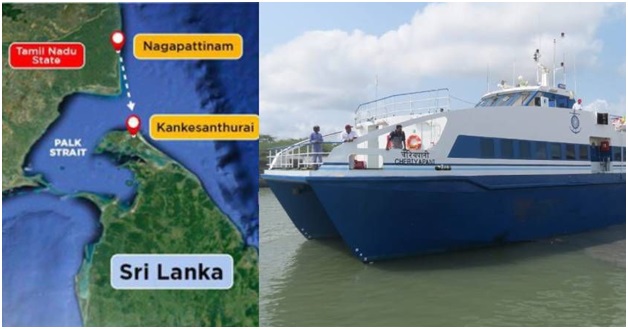
- 14 Oct 2023
Why in the News?
An international, high-speed passenger ferry service between Nagapattinam on the eastern coast of Tamil Nadu and Kankesanthurai in the northern province of Sri Lanka, has resumed as of Saturday, October 14, 2023, after a gap of nearly four decades.
About the Palk Strait:
- Palk Strait, situated between the Indian state of Tamil Nadu and the island nation of Sri Lanka, derives its name from Robert Palk, the governor of Madras Presidency (1755-1763) during the British Raj.
- Bounded by Pamban Island (India), Adam's (Rama's) Bridge, the Gulf of Mannar, and Mannar Island (Sri Lanka) to the south, the strait serves as a crucial link connecting the Bay of Bengal in the northeast with the Gulf of Mannar in the southwest.
- The southwestern segment of the strait is referred to as Palk Bay.
- Spanning 40 to 85 miles (64 to 137 km) in width, 85 miles in length, and with a depth of less than 330 feet (100 meters), it features the inflow of several rivers, including Tamil Nadu's Vaigai River.
- The port of Jaffna, serving as the commercial hub for northern Sri Lanka, is situated along this significant waterway.
Facts About Adam's Bridge:
- Adam's Bridge, also recognized as Rama's Bridge or Rama Setu, constitutes a series of limestone shoals situated between Pamban Island (Rameswaram Island) off the south-eastern coast of Tamil Nadu, India, and Mannar Island off the north-western coast of Sri Lanka.
- Geological evidence supports the idea that this bridge once formed a land connection between India and Sri Lanka.
- Extending over 50 km, it delineates the separation between the Gulf of Mannar to the southwest and the Palk Strait to the northeast.
- Featuring dry sandbanks and shallow waters ranging from 1 to 10 meters in depth, hindering navigation, scientists posit that Ram Setu is a natural formation resulting from tectonic movements and the entrapment of sand in corals.
- Significantly, this structure holds cultural significance in Hindu and Muslim mythology.
- Hindus believe it to be the bridge constructed by Lord Ram and his army for their journey to Lanka to confront Ravan.
- According to Islamic legend, Adam traversed this bridge to reach Adam’s Peak in Sri Lanka, where he purportedly stood on one foot in repentance for 1,000 years.
Manipur to Conduct Census of Amur Ffalcon (The New Indian Express)
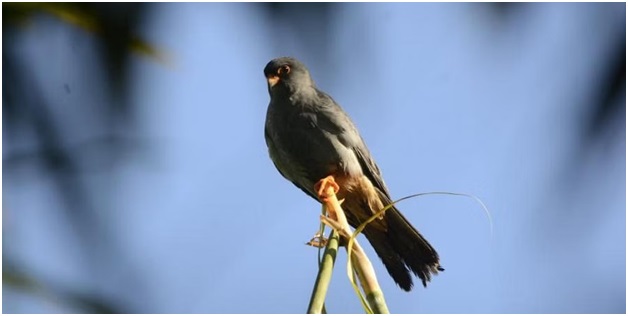
- 14 Oct 2023
Why in the News?
The Manipur Forest Department will conduct the first-ever Amur falcon census. This initiative in India is one of the several programs the agency is running to safeguard migrating birds.
About Amur Falcon:
- The Amur Falcon, a diminutive member of the falcon family locally known as Akhuipuina, predominantly frequents Manipur and Nagaland.
- Originating from southeastern Siberia and northern China, these birds embark on extensive migrations in vast formations to winter in Southern and East Africa, covering a one-way journey of approximately 20,000 km through India twice a year.
- In terms of conservation, the Amur Falcon is safeguarded by the Wildlife Protection Act of 1972, listed under Schedule IV.
- Hunting or possession of its meat is subject to legal repercussions, including imprisonment for up to three years, a fine of up to 25,000, or bonds.
- Initiating a conservation effort in 2018, the forest department employed radio tagging to study the birds' migratory routes.
- As per the International Union for Conservation of Nature (IUCN), the Amur Falcon is categorized as "Least Concern."
- Despite this, the species faces threats such as illegal trapping and killing during migration, along with habitat loss due to agricultural practices and land reclamation.
Egypt is Racing to Eliminate Hepatitis C (The Hindu)
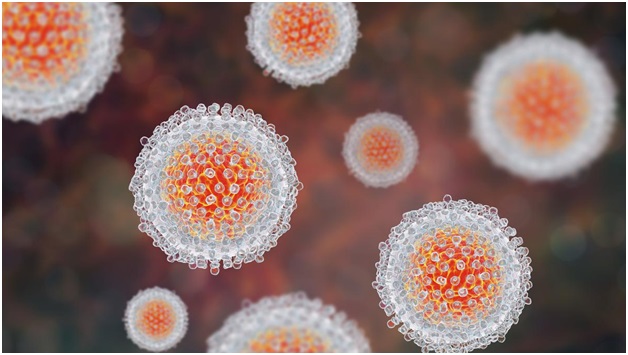
- 14 Oct 2023
Why in the News?
Recently the WHO announced that Egypt had made “unprecedented progress” towards eliminating hepatitis C.
Context:
- As per the World Health Organization (WHO), Egypt has attained a significant milestone by becoming the inaugural country to reach the "gold tier" status in its pursuit of eliminating hepatitis C, meeting the criteria established by the global health organization.
- Egypt has successfully identified 87% of individuals with hepatitis C and has administered curative treatment to 93% of those diagnosed, surpassing the WHO's gold-tier benchmarks.
- These targets include diagnosing a minimum of 80% of individuals with hepatitis C and offering treatment to at least 70% of those identified, marking a commendable achievement for Egypt in the global effort against the disease.
What is Hepatitis C?
- Hepatitis C is a viral infection impacting the liver, causing both acute (short-term) and chronic (long-term) illnesses that can be life-threatening.
- Transmission occurs through contact with infected blood, such as sharing needles, unsafe medical procedures like unscreened blood transfusions, and vertical transmission from an infected mother to her baby.
- It can also be transmitted through certain sexual practices involving blood exposure.
- Contrary to misconceptions, Hepatitis C is not spread through breast milk, food, water, or casual contact like hugging, kissing, or sharing food/drinks with an infected person.
- Symptoms encompass fever, fatigue, loss of appetite, nausea, vomiting, abdominal pain, dark urine, and jaundice (yellowing of the skin or eyes).
- Geographically, this viral infection is present in all WHO regions, with the Eastern Mediterranean Region and European Region bearing the highest disease burden.
- New infections often lack symptoms, making diagnosis challenging, and chronic infections may remain asymptomatic for decades until severe liver damage prompts noticeable symptoms.
- While no vaccine exists for Hepatitis C, antiviral medications offer effective treatment options.
What is Gold Tier Status?
- Gold tier status involves fulfilling distinct criteria, which encompass:
- Guaranteeing 100% blood and injection safety, with a commitment to maintaining a minimum of 150 needles/syringes annually for individuals who inject drugs (PWID).
- Achieving a diagnosis rate of over 80% for individuals living with chronic hepatitis C virus (HCV).
- Providing treatment to over 70% of individuals diagnosed with HCV.
- Instituting a sentinel surveillance program for hepatitis sequelae, with a focus on conditions such as liver cancer.
Centre Notifies Green Credit Programme and Ecomark Scheme (DownToEarth)
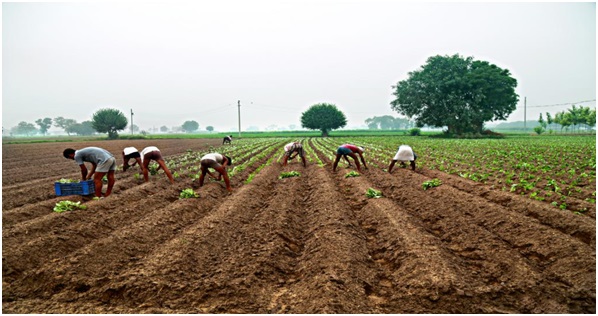
- 14 Oct 2023
Why in the News?
The Union Ministry of Environment, Forests and Climate Change on October 13, 2023, notified the ‘green credit’ programme, a first-of-a-kind market-based instrument designed to incentivise individuals, industries and local bodies for their voluntary environmental actions across diverse sectors.
About Green Credit Programme (GCP):
- Green Credit Program (GCP ) is an innovative market-based mechanism designed to incentivize voluntary environmental actions across diverse sectors, by various stakeholders like individuals, communities, private sector industries, and companies.
- The GCP's governance framework is supported by an inter-ministerial Steering Committee and The Indian Council of Forestry Research and Education (ICFRE) serves as the GCP Administrator, responsible for program implementation, management, monitoring, and operation.
- In its initial phase, the GCP focuses on two key activities: water conservation and afforestation.
- A user-friendly digital platform will streamline the processes for registration of projects, verification, and issuance of Green Credits.
- The Green Credit Registry and trading platform, being developed by ICFRE along with experts, would facilitate the registration and thereafter, the buying and selling of Green Credits.
- To obtain Green Credits, individuals and entities must register their activities through the central government's dedicated app/website www.moefcc-gcp.in.
- The Administrator will verify the activity through a designated agency, with self-verification for small projects.
- Once verification is complete, the Administrator will grant a Green Credit certificate which will be tradable on the Green Credit platform.
What is the Ecomark Scheme?
- The Ecomark Scheme provides accreditation and labelling for household and consumer products that meet specific environmental criteria while maintaining quality standards as per Indian norms.
- Products accredited under the Ecomark Scheme will adhere to specific environmental criteria, ensuring minimal environmental impact.
- It will build consumer awareness of environmental issues and encourage eco-conscious choices.
- It will also motivate manufacturers to shift towards environmentally friendly production. The scheme seeks to ensure accurate labelling and prevent misleading information about products.
- The Central Pollution Control Board administers the Ecomark Scheme in partnership with the Bureau of Indian Standards (BIS), which is the national body for standards and certification.
Both initiatives mark significant steps in promoting sustainable living, and environmental conservation, and, through individual and collective choice, embody eco-friendly practices in India. They align with global sustainability goals and reflect the government's commitment to conservation and protection of the environment.
A New Discovery: Unveiling an Underwater Mountain Range in the Southern Ocean (India Today)

- 28 Dec 2023
Why is it in the News?
Scientists have discovered an ancient underwater mountain range hidden within the world's strongest ocean current, the Antarctic Circumpolar Current.
Context:
- During a recent research expedition, scientists discovered a previously unknown mountain range deep beneath the Southern Ocean’s surface.
- Using state-of-the-art sonar technology, researchers were able to map out the underwater landscape with astonishing accuracy, revealing a vast range of peaks, ridges, and valleys.
- This newfound mountain range spans hundreds of miles and is estimated to be millions of years old.
- Geological Significance: This discovery holds immense importance for our understanding of the Earth’s geological history.
- The underwater mountain range provides key evidence of plate tectonics and the movement of Earth’s crust, as well as the formation of new landmasses.
- By studying the composition and structure of these underwater formations, scientists will be able to gain insights into the geological processes that have shaped our planet over millions of years.
- Moreover, the discovery raises intriguing questions about the relationship between underwater mountains and the surface landscapes they may be connected to.
- Researchers are eager to investigate whether similar mountain ranges exist on land and whether they share a common origin.
- Implications for Climate and Ecosystems: The newfound underwater mountain range also has significant implications for climate and marine ecosystems.
- These underwater peaks can act as barriers, influencing ocean currents and affecting nutrient distribution.
- Understanding the impact of these formations on ocean dynamics is crucial for predicting climate patterns and better managing marine resources.
- Additionally, these underwater mountains create a unique habitat for a diverse range of marine species.
- The ridges and valleys provide sheltered zones where marine life can thrive, with the potential for new species discoveries.
- Protecting these habitats will be critical in preserving the delicate balance of marine ecosystems.
About the Southern Ocean:
- The Southern Ocean, also referred to as the Antarctic Ocean is one of the Earth's five major ocean basins.
- Its formation traces back approximately 34 million years when Antarctica and South America underwent a gradual separation, resulting in the creation of the Drake Passage.
- This passage, situated between the tip of the Antarctic Peninsula and South America, delineates the Southern Ocean from the Pacific, Atlantic, and Indian Oceans, encompassing their tributary seas surrounding Antarctica below the 60° S latitude.
- Physiography: The ocean floor structure features a continental shelf, typically less than 160 miles (about 260 km) wide, expanding to a maximum width exceeding 1,600 miles (2,600 km) near the Weddell and Ross seas.
- Renowned for its robust winds, intense storms, marked seasonal variations, and frigid temperatures, the Southern Ocean is predominantly influenced by the Antarctic Circumpolar Current (ACC).
- This current, the longest, strongest, and deepest-reaching on Earth, follows a clockwise circulation around the continent, surpassing all others in the volume of water it transports globally.
- Biodiversity: The Southern Ocean sustains diverse flora and fauna, with a majority of marine life relying on the nutrient-rich phytoplankton found in the Antarctic Convergence.
- Notable species include whales, penguins, orcas, and seals, contributing to the region's rich biodiversity.
A new non-invasive formaldehyde sensor can detect adulterated fish at room temperature (DST GOI)

- 28 Dec 2023
Why is it in the News?
A new low-cost sensor made of metal oxide nanoparticles-reduced graphene oxide composite can detect formalin adulteration in fishes at room temperature in a non-invasive way. The sensor shows long-term stability with a low detection limit.
Context:
- A sensor designed for the detection of formalin in fish has been developed by the Nanomaterials and Nanoelectronics Laboratory at Guwahati University, Assam.
- The formalin sensor utilizes a composite of tin oxide-reduced graphene oxide, synthesized through a process involving the wet chemical approach for Graphene Oxide (GO) and the hydrothermal route followed by calcination for the tin oxide-reduced graphene oxide composite (rGO-SnO2).
- Testing of the sensor has been conducted both at the laboratory scale and on fish procured from the fish markets in the Guwahati region, specifically targeting potential adulteration.
- This groundbreaking research has received support from DST-PURSE (Promotion of University Research and Scientific Excellence) and has been documented in the journal ACS Appl. Nano Mater.
- Research Support: The research behind this innovative sensor is backed by DST-PURSE (Promotion of University Research and Scientific Excellence).
About Non-Invasive Formaldehyde Sensor:
- This non-invasive formaldehyde sensor incorporates a composite of tin oxide-reduced graphene oxide (rGO-SnO2) as its key materials.
- While reduced graphene oxide (rGO) has been widely utilized for detecting various toxic gases and volatile organic compounds (VOCs), tin oxide (SnO2) has demonstrated notable efficacy in formaldehyde detection, both in its pristine form and when combined with different compounds, including graphene.
- This combination is favoured for its heightened stability and sensitivity to low concentrations of formaldehyde.
- Synthesis Process: The fabrication process involves a wet chemical approach for the production of graphene oxide (GO), followed by the hydrothermal route and subsequent calcination to synthesize the tin oxide-reduced graphene oxide composite (rGO-SnO2).
- Comparison with Existing Sensors: Unlike commercial formalin sensors for fish, which are primarily electrochemical-based or colorimetric-based and often invasive, this novel sensor, made from metal oxide nanoparticles and reduced graphene oxide, offers a cost-effective and non-invasive method for detecting formalin adulteration in fishes at room temperature.
- Challenges with Existing Sensors: Traditional electrochemical sensors, though widely used, tend to be expensive, and colourimetric sensors, while more cost-effective, share the invasive nature of their electrochemical counterparts. Both face challenges related to low-level and selective detection.
- Significance of the New Sensor: The development of gas sensors based on 2D materials, such as graphene, opens up new possibilities for the effective detection of toxic vapours at room temperature.
- These sensors hold promise for accurately detecting formalin emanating from adulterated food products.
What is Formaldehyde?
- Formaldehyde (CH?O) is an odorless, colorless gas with high toxicity and flammability under standard room temperature conditions.
- Primary Applications:
- Production of fertilizers, paper, plywood, and certain resins.
- Utilized as a food preservative.
- Found in glues, resins, dyes, textiles, disinfectants, building materials, automotive components, embalming processes, and laboratory settings.
- Incorporated into household items like antiseptics, medications, and cosmetics.
- Potential Health Effects:
- Exposure to formaldehyde may result in irritation of the skin, throat, lungs, and eyes. Additionally, formaldehyde is recognized as a carcinogenic substance.
For Huntington’s disease clues, scientists are looking in fruit flies (The Hindu)
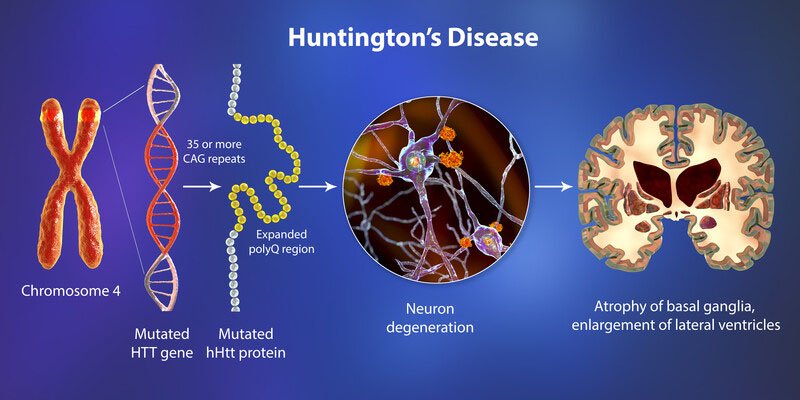
- 28 Dec 2023
Why is it in the News?
Scientists at the University of Szeged in Hungary have made significant progress in advancing our understanding of Huntington's disease through the study of fruit flies.
What is Huntington’s Disease?
- Huntington’s disease (HD) is a brain disorder that is passed down in families from generation to generation.
- It is caused by an error in the DNA instructions that build our body and keep it running.
- DNA is made up of thousands of genes, and people with HD have a small defect in a gene called huntingtin.
- Over time, this error causes damage to the brain and causes symptoms of Huntington’s disease.
- Huntington’s disease causes a person’s physical, mental and emotional abilities to deteriorate, usually during their prime at work, and there is currently no cure.
- Most people start developing symptoms in adulthood, between the ages of 30 and 50, but HD can also occur in children and young adults.
- Huntington’s disease is known as a family disease because each child of a parent with HD has a 50/50 chance of inheriting the defective gene.
Huntington’s Disease Symptoms:
- Symptoms of Huntington’s disease can vary greatly from person to person but typically include:
- Personality changes, mood swings and depression
- Forgetfulness and impaired judgment
- Unsteady gait and involuntary movements (chorea)
- Slurred speech, difficulty swallowing and significant weight loss.
- Symptoms typically worsen over the course of 10 to 25 years, affecting the ability to reason, walk, and speak.
- The person with HD or their friends and family may notice difficulty planning, remembering, and concentrating on the task.
- They can develop mood swings such as depression, anxiety, irritability, and anger.
- Most people with Huntington’s disease become “fidgety” and develop facial and limb movements known as chorea, which they cannot control.
- The symptoms of Huntington’s disease are sometimes described as ALS, Parkinson’s, and Alzheimer’s all at the same time.
Huntington’s Disease Treatment:
- No treatment can stop or reverse the progression of Huntington’s disease.
- Antipsychotic medications can relieve chorea and help control hallucinations, delusions, and violent outbursts.
- Huntington’s disease causes disability that gets worse over time.
How the PM JANMAN scheme can help Particularly Vulnerable Tribal Groups (Indian Express)
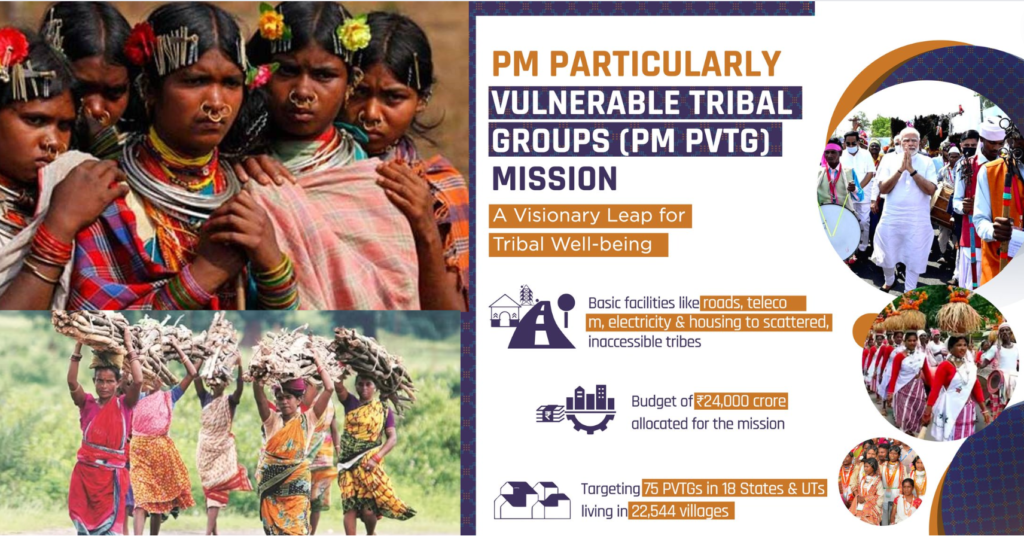
- 28 Dec 2023
Why is it in the News?
Recently, the Union Cabinet approved the Pradhan Mantri Janjati Adivasi Nyaya Maha Abhiyan (PM JANMAN), aimed at providing PVTG households and habitations with basic facilities such as safe housing, clean drinking water and sanitation, improved access to education, health and nutrition, road and telecom connectivity, and sustainable livelihood opportunities.
What is the PM-JANMAN Scheme?
- PM-JANMAN is a government initiative aimed at integrating tribal communities into the mainstream of development.
- The scheme, comprising both Central Sector and Centrally Sponsored Schemes, will be executed collaboratively by the Ministry of Tribal Affairs, State governments, and Particularly Vulnerable Tribal Groups (PVTG) communities.
Key Features:
- Implementation Scope: The scheme focuses on 11 critical interventions managed by 9 line Ministries, ensuring the effective execution of existing schemes within villages inhabited by PVTGs.
- Sectoral Coverage: PM-JANMAN spans various sectors, encompassing initiatives such as ensuring safe housing through the PM-AWAS Scheme, access to clean drinking water, improved healthcare, education, nutrition, road and telecommunications connectivity, and the promotion of sustainable livelihoods.
- Special Initiatives: The plan includes specific initiatives such as the establishment of Van Dhan Vikas Kendras to facilitate the trade of forest produce, deployment of off-grid solar power systems for 1 lakh households, and installation of solar street lights.
- Objectives: PM-JANMAN aims to enhance the quality of life and overall well-being of PVTGs by addressing the various forms of discrimination and exclusion they face.
- Additionally, it recognizes and values the unique and significant contributions of PVTGs to both national and global development.
How Does PM-JANMAN Differ?
- Distinctive Identification and Recognition: Criticism has arisen over outdated criteria for identifying Particularly Vulnerable Tribal Groups (PVTGs).
- The presence of repetitive names and discrepancies in recognition across states has led to confusion and exclusion.
- Addressing these concerns, PM-JANMAN introduces a Human Development Index for PVTGs, aiming to enhance proper identification and tailored development planning based on updated and comprehensive data.
- Participatory Bottom-Up Approach: In a departure from the 'one-size-fits-all' approach, PM-JANMAN adopts customised strategies that respect the unique needs and priorities of PVTGs.
- Emphasizing a participatory bottom-up approach, the scheme actively involves PVTGs in decision-making processes, particularly regarding land rights, social inclusion, and cultural preservation.
- Livelihood Promotion: PM-JANMAN focuses on sustainable livelihoods for PVTGs by providing skills training, essential resources such as land and credit, and implementing the Forest Rights Act (FRA) to secure land titles, particularly under Section 3(1)(e) for primitive tribal groups and pre-agricultural communities.
- The scheme encourages the preservation of cultural heritage through the promotion of traditional technologies and skill enhancement via industry partnerships.
- Health, Nutrition, and Education: To address the unique challenges faced by PVTGs, PM-JANMAN incorporates Mobile Medical Health Units for healthcare outreach in remote areas.
- The scheme also emphasizes cultural sensitivity in education by integrating PVTG culture and language into the curriculum, providing transportation, and training teachers about PVTG cultural contexts.
- Infrastructure Development: Recognizing that PVTG habitations may not meet standard criteria for existing schemes, PM-JANMAN relaxes guidelines for infrastructure schemes like Pradhan Mantri Grameen Sadak Yojana, Pradhan Mantri Awas Yojana, and Jal Jeevan Mission.
- This ensures improved access to housing, water, sanitation, electricity, and connectivity for PVTGs.
What are Particularly Vulnerable Tribal Groups (PVTGs)?
- PVTGs represent the most vulnerable segments within tribal communities, facing heightened challenges in various aspects of development.
- Due to their distinct vulnerabilities, more developed and assertive tribal groups often receive a significant portion of tribal development funds, necessitating a focused allocation of resources for the advancement of PVTGs.
- The designation of PVTGs dates back to 1975 when, based on the recommendations of the Dhebar Commission, the Government of India identified 52 tribal groups with unique vulnerabilities.
- Presently, there are 75 PVTGs among the 705 Scheduled Tribes in India.
- Geographically, PVTGs are distributed across 18 states and one Union Territory, as per the 2011 census, with Odisha having the highest number, exceeding 2.5 lakh individuals.
- Distinctive Characteristics of PVTGs:
- Stagnant or declining trends.
- Primarily pre-agricultural practices.
- Exceptionally low educational attainment.
- Predominantly subsistence level, indicating a reliance on basic, self-sustaining economic activities.
How Japan’s moon-landing attempt in January will affect Chandrayaan 4 (The Hindu)

- 28 Dec 2023
Why is it in the News?
Recently, the “Moon Sniper” lander developed by Japan’s space agency successfully entered lunar orbit.
About the Smart Lander for Investigating Moon (SLIM) Mission:
- The Smart Lander for Investigating Moon (SLIM) is a spacecraft crafted and launched by the Japan Aerospace Exploration Agency (JAXA) on September 7, 2023, from the Tanegashima spaceport.
- Remarkably lightweight at 590 kg, SLIM embarked on its mission alongside XRISM, a cutting-edge X-ray space telescope, on an H-2A rocket.
- Upon launch, SLIM assumed an elliptical orbit around the moon within a span of approximately three minutes.
- Notably, the apogee (farthest point) of this orbit extends to 4,000 km, while the perigee (closest point) hovers at 600 km above the lunar surface.
Objectives of SLIM on the Lunar Surface:
- Before its lunar descent, SLIM is programmed to release two compact rovers known as Lunar Excursion Vehicle (LEV) 1 and 2.
- Working in tandem with SLIM, LEV-1, and LEV-2 are tasked with conducting a comprehensive study of the lunar surface near the designated landing area.
- Their mission encompasses the collection of temperature and radiation readings, as well as endeavours to investigate the moon's mantle.
- This collaborative effort by SLIM and its rovers aims to enhance our understanding of lunar conditions and contribute valuable insights to lunar exploration.
What is the XRISM Mission:
- The X-Ray Imaging and Spectroscopy Mission (XRISM) is a collaborative effort between the Japan Aerospace Exploration Agency (JAXA) and the National Aeronautics and Space Administration (NASA), with valuable contributions from the European Space Agency (ESA).
- Mission Objective: XRISM is designed to observe X-rays emanating from deep space, aiming to precisely identify their wavelengths with an unprecedented level of accuracy.
- The mission employs cutting-edge spectroscopy techniques to measure changes in the brightness of celestial objects across various wavelengths.
- Technological Advancements: Leveraging state-of-the-art spectroscopy, XRISM can detect X-rays within a broad energy spectrum ranging from 400 to 12,000 electron volts.
- To provide a perspective, the energy of visible light typically falls within the 2 to 3 electron volts range.
- This expanded energy range enables astrophysicists to gain novel insights into some of the universe's most dynamic regions, vast structures, and entities characterized by formidable gravitational forces.
India, Russia ink pacts on the construction of future power units of the Kudankulam nuclear plant (The Hindu)
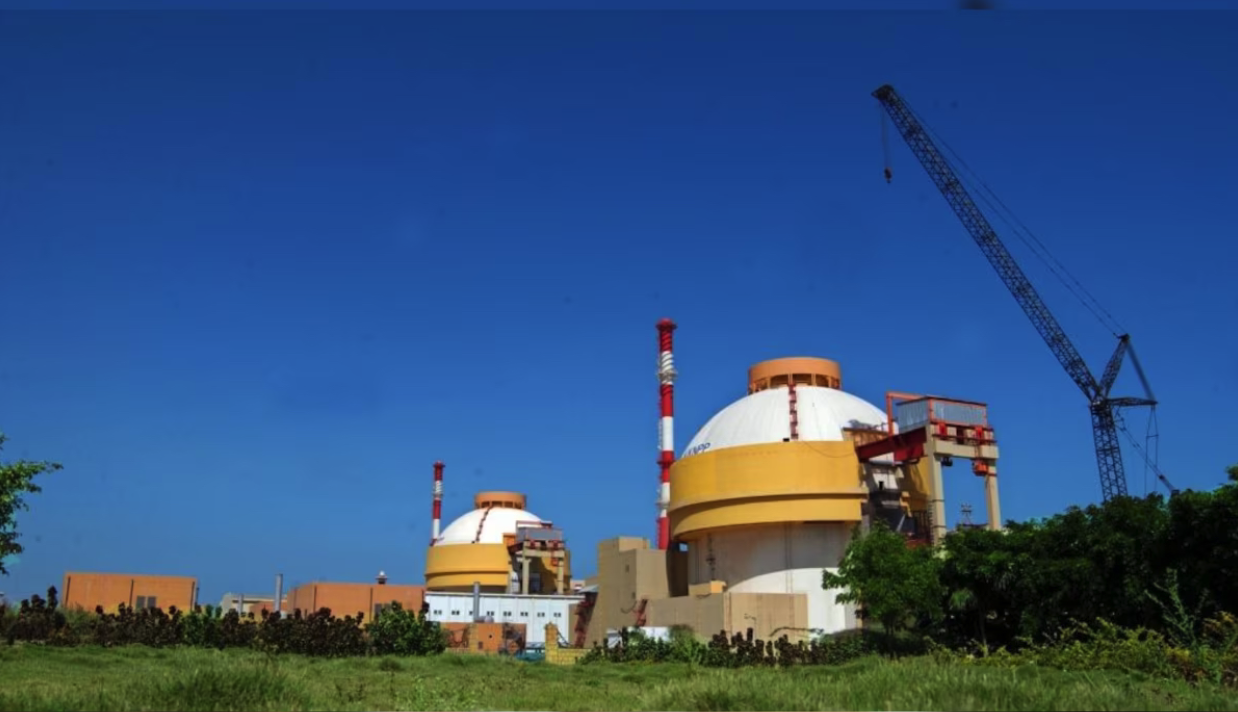
- 27 Dec 2023
Why is it in the News?
In a major boost to their time-tested partnership, India and Russia recently signed some "very important" agreements related to the construction of the future power-generating units of the Kudankulam nuclear power plant.
About the Kudankulam Nuclear Power Project:
- The Kudankulam Nuclear Power Project is India's largest nuclear power plant situated in the Tirunelveli district of Tamil Nadu.
- It is being developed by the Nuclear Power Corporation of India (NPCIL) in collaboration with Russia's Rosatom State Atomic Energy Corporation.
- The construction began in March 2002.
- Since February 2016, the first power unit of the Kudankulam NPP has been steadily operating at its design capacity of 1,000 MW.
- The plant is expected to start operating at full capacity in 2027.
- Water-Water Energy Reactor: The Kudankulam Nuclear Power Project employs VVER (Water-Water Energy Reactor) technology, a pressurized water reactor design developed in the former Soviet Union, known for its safety and reliability.
- Power Generation Capacity: The current power generation capacity is 2×1,000 MWe VVER, expected to significantly increase with the construction of four additional reactors, estimated at ?89,470 crore.
- All units are subject to International Atomic Energy Agency (IAEA) safety analysis, except the Kalpakkam nuclear plant, reserved for strategic use under the India-US Nuclear Agreement.
What is the 3-Stage Nuclear Programme of India?
- India's nuclear program is structured into three stages, strategically designed to harness the extensive Thorium deposits within the country, constituting approximately 25% of the world's total reserves.
- This focus on Thorium is crucial as India possesses limited Uranium reserves, accounting for about 2% of the global uranium reserves.
- 1st Stage: The initial stage employs Pressurized Heavy Water Reactors that operate on natural uranium, consisting of 99.3% U-238 and 0.7% U-235.
- The fissile U-235 triggers a chain reaction, while the non-fissile U-238 transforms into Pu-239 as a byproduct (spent fuel).
- This Pu-239 is subsequently utilized in the Fast Breeder Reactors in the 2nd stage.
- 2nd Stage: Fast Breeder Reactors primarily rely on Plutonium, utilizing a combination of Plutonium-239 from the 1st stage and the abundant U-238 found on Earth to generate additional Plutonium inside the reactor.
- As U-238 does not initiate a chain reaction, the reactors are termed Breeder reactors.
- To maximize the chances of neutron interaction with U-238, these reactors, known as Fast Breeder Reactors, omit a moderator to slow down neutrons.
- Once Plutonium-239 is fully consumed, Thorium is introduced to convert it into U-233, to be used in the 3rd stage.
- 3rd Stage: Thermal Breeder Reactors utilize U-233 produced in the 2nd stage, incorporating thorium-232.
- Notably, Thorium is non-radioactive and non-fissile. Since these reactors also generate U-233 from Thorium-232, they are classified as breeder reactors.
- India's significant reserves of thorium, particularly in the form of monazite sand, emphasize the critical role of the 3rd stage in India's nuclear energy portfolio.
PM Narendra Modi calls upon religious leaders and social organizations to launch a mass movement against drugs (NewsOnAir)
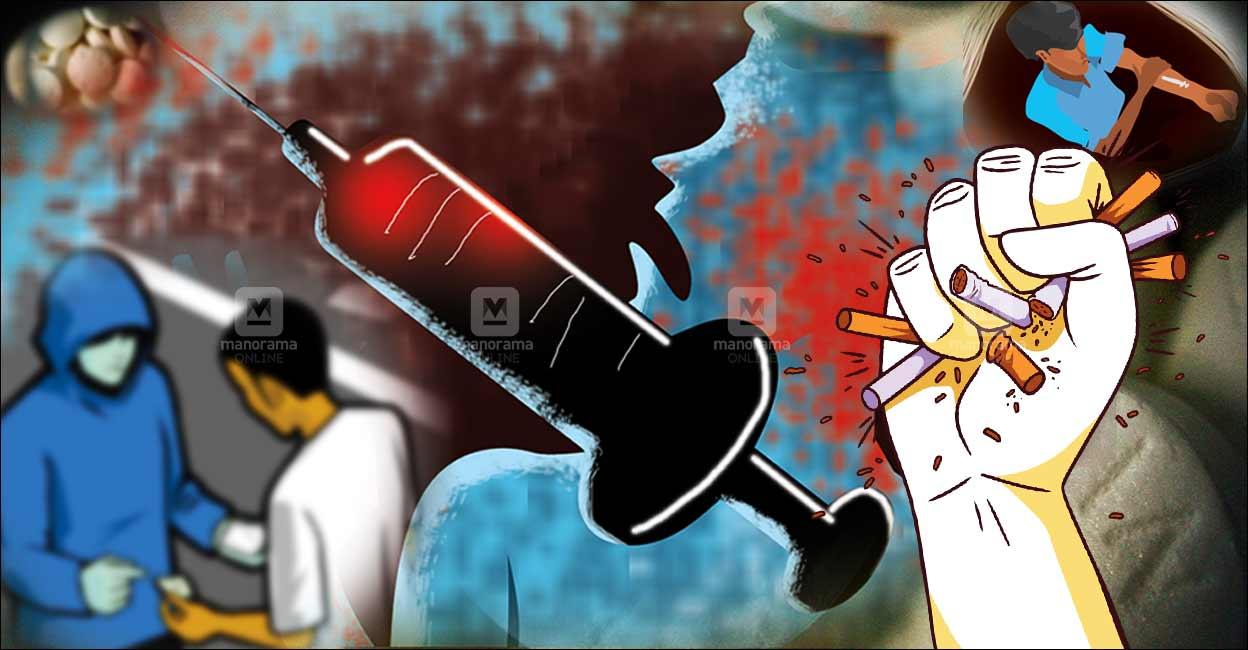
- 27 Dec 2023
Why is it in the News?
On the occasion of Veer Bal Diwas in New Delhi, PM Narendra Modi calls upon religious leaders and social organizations to launch a mass movement against drug menace.
Drug Menace in India:
- Alcohol, cannabis, opium, and heroin constitute the primary drugs abused in India.
- Approximately 13% of substance abusers in the country are under 20 years old.
- Adolescence is identified as a critical-risk period for the initiation of substance use.
- Children impacted by substance abuse fall under the category of children in need of care and protection as per the Juvenile Justice (Care and Protection of Children) Act 2015.
- In various regions, including Punjab, Assam, Mizoram, Chhattisgarh, Gujarat, Haryana, Bihar, Delhi, etc., drug abuse prevalence is notably high.
- Key causes of drug abuse include factors such as poverty, peer pressure, illiteracy, low self-esteem, and genetic predisposition.
Challenges in Combating the Drug Menace:
- India, strategically located between the Death Triangle (Thailand, Myanmar, and Laos) and Death Crescent (Pakistan, Afghanistan, and Iran), is a prominent hub for drug trafficking, particularly in major opium production regions globally.
- Porous borders exacerbate the problem, and technological advancements, such as the utilization of the dark net and cryptocurrency for drug trafficking, further complicate law enforcement efforts.
- Criminalizing drug abuse contributes to social stigma for addicts, deterring them from seeking essential medical assistance.
- There is a notable absence of comprehensive studies assessing the societal impact of drug abuse, hindering the formulation of informed strategies.
Efforts to Combat the Drug Menace:
- The Narcotics Drugs and Psychotropic Substances (NDPS) Act of 1985 outlines measures for identification, treatment, and rehabilitation.
- The Nasha Mukt Bharat Abhiyaan targets 272 highly vulnerable districts with a focus on community outreach.
- The Seizure Information Management System (SIMS) portal facilitates the management of cases involving substantial drug seizures.
- The National Action Plan for Drug Demand Reduction (NAPDDR) spanning 2018-2025 adopts a comprehensive, multi-pronged strategy.
- Furthermore, adherence to international conventions, including the Convention on Narcotic Drugs (1961) and the Convention on Psychotropic Substances (1971), reinforces India's commitment to addressing the global issue of drug abuse.
Atomic watchdog report says Iran is increasing production of highly enriched uranium (Indian Express)
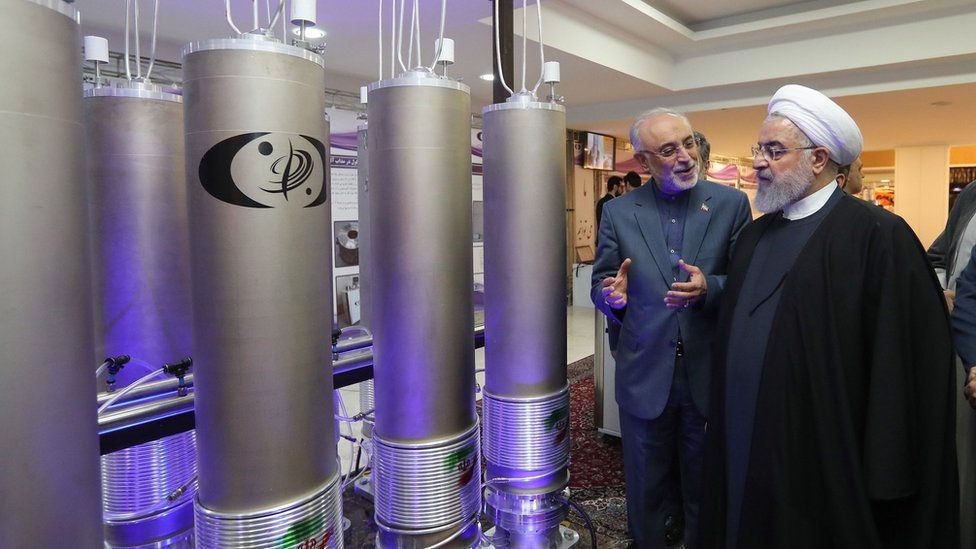
- 27 Dec 2023
Why is it in the News?
Iran has increased the rate at which it is producing near weapons-grade uranium in recent weeks, reversing a previous slowdown that started in the middle of this year, the International Atomic Energy Agency said in a report.
What is Uranium Enrichment?
- Natural uranium is comprised of two isotopes, with approximately 99% being U-238 and only about 0.7% being U-235.
- U-235 is a fissile material capable of sustaining a chain reaction within a nuclear reactor.
- The enrichment process involves increasing the proportion of U-235 through isotope separation, effectively isolating U-238 from U-235.
- For the production of nuclear weapons, enrichment is necessary up to 90% or more, referred to as weapons-grade uranium.
- Low-enriched uranium, typically containing a 3-5% concentration of U-235, is suitable for generating fuel for commercial nuclear power plants.
- In contrast, highly enriched uranium, boasting a purity of 20% or more, finds application in research reactors.
Key Facts About Uranium:
- Discovered in 1789 by the German chemist Martin Klaproth, Uranium is a silvery-white metallic chemical element found in the periodic table, characterized by its atomic number 92.
- This element holds the distinction of having the highest atomic weight among all naturally occurring elements.
- Naturally present in low concentrations in soil, rock, and water, uranium is commercially extracted from minerals like uraninite.
- The mining of uranium ore can be undertaken through open pits or underground excavations, followed by crushing and processing at a mill to isolate the valuable uranium.
- An alternative method involves the direct dissolution of uranium from ore deposits in the ground, known as in-situ leaching, with the extracted uranium then pumped to the surface.
About the International Atomic Energy Agency (IAEA):
- The International Atomic Energy Agency is an intergovernmental organization that seeks to promote the peaceful use of nuclear energy and to inhibit its use for any military purpose, including nuclear weapons.
- Established as an autonomous entity through its international treaty, the IAEA Statute, the organization, nonetheless, reports to both the United Nations General Assembly and the Security Council.
- Headquartered in Vienna, Austria, the IAEA collaborates with its Member States and various global partners to advance the safe and peaceful utilization of nuclear technologies.
- It employs nuclear safeguards, encompassing monitoring, inspection, information analysis, and other measures, to ensure the peaceful nature of nuclear activities and to detect and deter any potential diversion towards weapons-related purposes.
- The IAEA plays a crucial role in implementing comprehensive safeguards agreements mandated by the Nuclear Non-Proliferation Treaty (NPT), acting as a frontline defense against nuclear weapons proliferation.
- Additionally, the agency facilitates the exchange of scientific and technical information among its Member States.
- A key function of the IAEA is to bolster national, regional, and international capabilities to respond effectively to nuclear and radiological incidents, thereby minimizing their impact.
Zombie deer disease: Why are scientists concerned over its transmission to humans? (TOI)
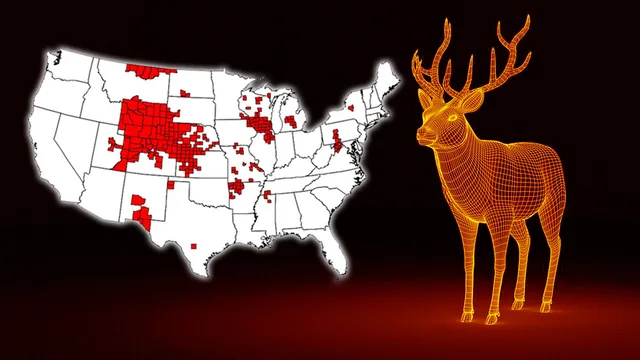
- 27 Dec 2023
Why is it in the News?
Researchers in the US have warned that Chronic Wasting Disease (CWD) spreading among wildlife across North America, could also spread to humans.
What is Zombie Deer Disease??
- According to the US Centers for Disease Control and Prevention (CDC), Zombie deer disease or chronic wasting disease is a prion disease that affects deer, elk, reindeer, sika deer and moose.
- Prion diseases affect both humans and animals and are distinguished by long incubation periods.
- In the case of chronic wasting disease or the zombie deer disease, "it may take over a year before an infected animal develops symptoms.
- History of the Disease?: The zombie deer disease was first discovered in Colorado (USA) in 1967.
- Until now, reports of humans getting affected have not come to the fore.
- However, the findings of several studies suggest that it can easily jump to human beings.
Why are health experts and scientists worried about a possible transmission??
- Experts are giving examples of the mad cow disease or the Bovine Spongiform Encephalopathy (BSE).
- “The BSE outbreak in Britain provided an example of how, overnight, things can get crazy when a spillover event happens from livestock to people.
Symptoms of the Disease:
- The common signs of the disease are drastic weight loss (wasting), stumbling, and other neurologic symptoms.
- Other symptoms seen in animals infected with this disease are listlessness, drooling, excessive thirst or urination, drooping ears, and lack of fear of people.
It is difficult to eradicate this disease??
- The chronic wasting disease is extremely difficult to eradicate from the environment once the infection has started.
- It can persist for years in dirt or on surfaces, and it is resistant to disinfectants, formaldehyde, radiation, and incineration at 600C (1,100F).
- Chronic Wasting Disease (CWD) is fatal to animals, and there are no treatments or vaccines.
Prevention?:
- To avoid the spread of the disease, humans should avoid shoot, handling, or eating meat from deer and elk that look sick or are acting strangely or are found dead.
- Individuals should wear latex or rubber gloves when dressing the animal or handling the meat.
Speed up measures for a new dam at Mullaperiyar, Kerala tells Central Water Commission (The Hindu)
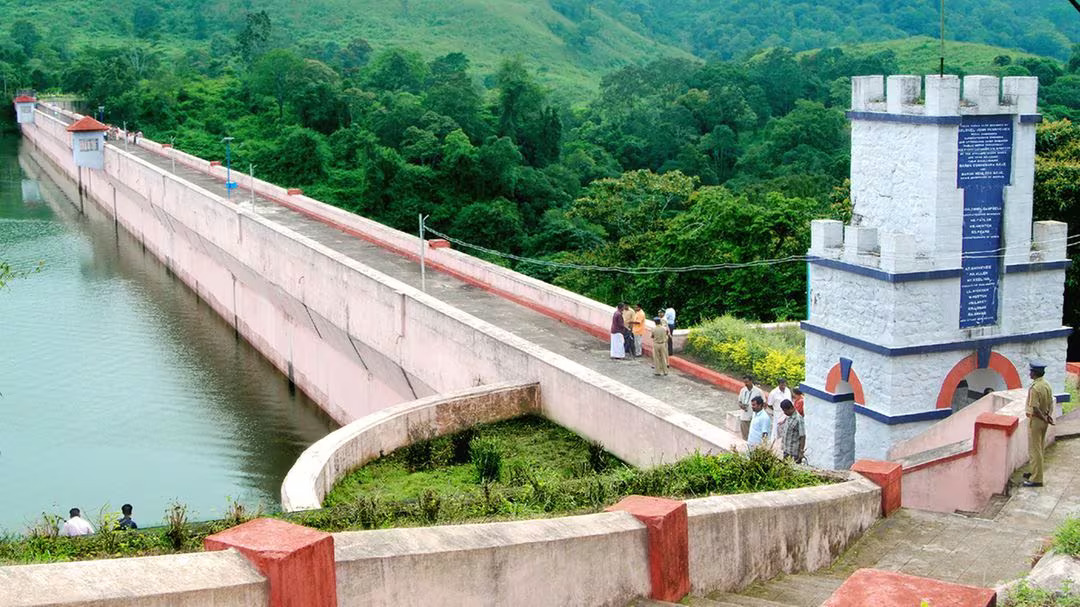
- 27 Dec 2023
Why is it in the News?
Recently the State government of kerala has urged the Centre to speed up measures for building a new dam at Mullaperiyar in the Idukki district at a meeting with the Central Water Commission.
About the Central Water Commission (CWC):
- The Central Water Commission (CWC) is a leading technical organization in India dedicated to water resources management.
- Currently operating as an attached office of the Ministry of Jal Shakti, Department of Water Resources, River Development, and Ganga Rejuvenation, Government of India, it plays a pivotal role in overseeing various aspects of water resource management nationwide.
Key Functions:
- Initiation and Coordination: The Commission is responsible for initiating, coordinating, and advancing schemes in collaboration with concerned State Governments.
- These schemes focus on controlling, conserving, and utilizing water resources for Flood Control, Irrigation, Navigation, Drinking Water Supply, and Water Power Development.
- Investigation and Execution: The CWC undertakes the investigation, construction, and execution of water resource schemes as deemed necessary.
- Leadership and Structure: The Commission is led by a Chairman, holding the status of Ex-Officio Secretary to the Government of India.
- The organizational structure includes three wings:
- Designs and Research (D&R) Wing
- River Management (RM) Wing
- Water Planning and Projects (WP&P) Wing
- Each wing is overseen by a full-time member with the status of Ex-Officio Additional Secretary to the Government of India.
- Headquarters: The headquarters of the Central Water Commission is located in New Delhi.
Key Facts About Mullaperiyar Dam:
- The Mullaperiyar Dam is a masonry gravity dam, situated on the Periyar River in Thekkady, Idukki district of Kerala.
- Situated at an elevation of 881 meters above sea level, it graces the Cardamom Hills within the Western Ghats.
- The dam is strategically located at the convergence of the Mullayar and Periyar rivers.
- Its construction, led by the British Corps of Royal Engineers under Pennycuick, commenced in 1887 and concluded in 1895.
- Utilizing limestone and "Surkhi" (a blend of burnt brick powder, sugar, and calcium oxide), the dam serves the purpose of redirecting west-flowing River Periyar waters to the rain shadow regions of Theni, Madurai, Sivaganga, and Ramanathapuram districts in Tamil Nadu.
- The Periyar National Park is located around the dam's reservoir.
- Despite its location in Kerala, the dam is operated and maintained by Tamil Nadu under a 999-year lease agreement established during British rule.
New Toad Species Discovered in Dampa Tiger Reserve of Mizoram (HT)
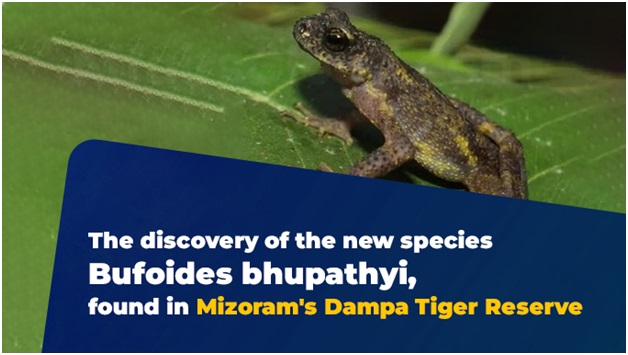
- 12 Oct 2023
Why in the News?
A group of scientists from India and the United Kingdom have discovered a new species of toads, the third of a genus found only in a very narrow area in northeast India.
About the Recently Discovered Toad Species:
- This newfound toad species, belonging to the bufoides genus, marks the third identified within a limited area in northeast India.
- Distinguished by its interdigital webbing, unique colouration, skin tuberculation, and the existence of ovoid, tuberculated, and depressed parotid glands, this species adds to the diversity of its genus.
- The preceding species from the same genus, Bufoides meghalayanus and Bufoides kempi, were previously identified in the region of Meghalaya.
- In recognition of its discovery and to honour the significant contributions of the renowned herpetologist S. Bhupathy, this new species has been aptly named after him.
About the Dampa Tiger Reserve:
- Situated in the Lushai Hills on the western side of Mizoram, the Dampa Tiger Reserve holds significance for its unique features.
- Establishment: Designated as a tiger reserve in 1994 under the Project Tiger initiative.
- Geographical Boundaries: Bordered on the west by the Chittagong hill tracts (Sazek hill range) of Bangladesh.
- The terrain is characterized by hills, with elevations ranging from 49 to 1095 meters above mean sea level.
- Prominent peaks include Chhawrpialtlang (1095m), Dampatlang (869m), and Pathlawilunglentlang (780m).
- Vegetation Diversity: Encompassing tropical evergreen to semi-evergreen forests, the reserve boasts a diverse range of vegetation.
- River Systems: Drained by the Khawthlangtuipui River in the west and the Teirei River in the east, with tributaries like Keisalam, Seling, and Aivapui flowing through the reserve.
- Fauna: Diverse mammalian species inhabit the reserve, including Hoolock Gibbon, Rhesus Macaque, Assamese Macaque, Pig-Tailed Macaque, Stump-Tailed Macaque, and Phayre’s Leaf Monkey.
- Flora: The reserve boasts a rich flora, featuring species such as Dipterocarpus turbinatus, Dipterocarpus marcocarpus, Terminalia myriocarpa, and Michelia champaca, among others.
Project Nilgiri Tahr’ Launched in Tamil Nadu (The Hindu)
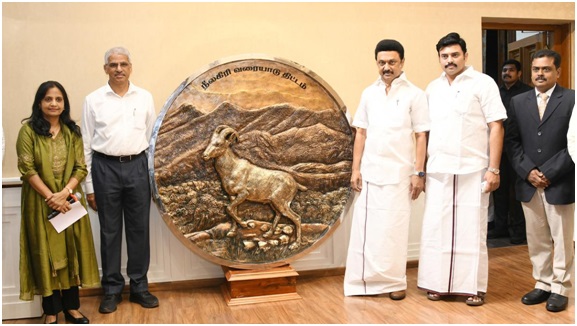
- 12 Oct 2023
Why in the News?
Consolidating efforts towards the conservation of Tamil Nadu’s State Animal, Chief Minister M.K. Stalin on Thursday, October 12, 2023, launched the ‘Project Nilgiri Tahr’ from the Secretariat in Chennai.
About Nilgiri Tahr:
- The Nilgiri Tahr, scientifically known as Nilgiritragus hylocrius, is an endangered mountain ungulate that is native to the southern part of the Western Ghats.
- Locally referred to as 'Varayaadu,' these creatures are renowned for their remarkable climbing abilities on steep cliffs, earning them the moniker "Mountain Monarch."
- Notably, the Nilgiri Tahr holds the distinction of being the state animal of Tamil Nadu.
Distribution:
- The current range of Nilgiri Tahrs is confined to approximately 5% of the Western Ghats in southern India, specifically in the states of Kerala and Tamil Nadu.
- The Eravikulam National Park in Kerala is home to the highest density and the largest surviving population of Nilgiri Tahrs.
Habitat:
- Nilgiri Tahrs inhabit open montane grassland habitats, thriving at elevations ranging from 1200 to 2600 meters in the South Western Ghats.
Distinctive Features:
- Characterized by a stocky body, short coarse fur, and a bristly mane, Nilgiri Tahrs exhibit sexual dimorphism, with mature males being larger and darker in colour.
- Both males and females possess curved horns, with males having larger ones measuring up to 40 cm, while females' horns reach approximately 30 cm.
- Adult males develop a light grey area or 'saddle' on their backs, leading to the term 'saddlebacks.' The species is recognized by its short grey-brown or dark coat.
Conservation Status:
- The Nilgiri Tahr is classified as Endangered on the IUCN Red List, signifying the critical need for conservation efforts.
- Additionally, it is accorded the highest protection under the Wildlife (Protection) Act of India, 1972, listed in Schedule I.
ICRISAT Joins One CGIAR Global Initiative (The Hindu BusinessLine)
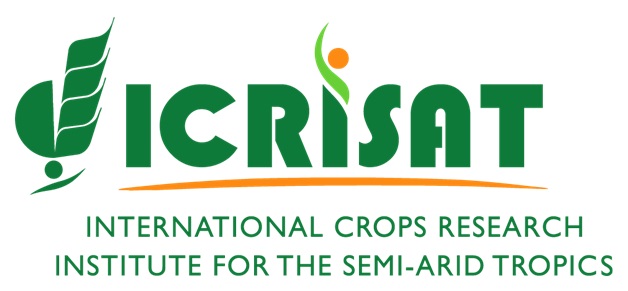
- 12 Oct 2023
Why in the News?
The International Crops Research Institute for the Semi-Arid Tropics (ICRISAT), a Hyderabad-based international research institute with a focus on tropical dryland agrifood system innovation, has joined the One CGIAR integrated partnership.
What is One CGIAR Global Initiative?
- The One CGIAR global initiative is designed to establish a cohesive approach to transform food, land, and water systems in response to the challenges posed by the climate crisis.
- This collaborative effort involves the CGIAR System Organisation and 12 research centres operating under the umbrella of One CGIAR.
- CGIAR is a publicly-funded network of research centres focused on agrifood systems, operating in over 80 countries.
Key Facts about ICRISAT:
- ICRISAT, a non-profit, non-political international research organization, is dedicated to agricultural research for development in Asia and sub-Saharan Africa.
- Its mission is to support farmers by providing improved crop varieties and hybrids, particularly aiding smallholder farmers in arid regions to combat climate change.
- The organization specializes in research on five highly nutritious, drought-tolerant crops: chickpea, pigeonpea, pearl millet, sorghum, and groundnut.
- Recognized for its impactful work, ICRISAT was awarded the 2021 Africa Food Prize for the Tropical Legumes Project, contributing to improved food security across 13 countries in sub-Saharan Africa.
- ICRISAT is headquartered in Hyderabad, Telangana State, India, with two regional hubs in Nairobi, Kenya, and Bamako, Mali.
- Through its research and initiatives, ICRISAT plays a crucial role in addressing agricultural challenges and promoting sustainable development in diverse regions.
India Ranks 111 in Global Hunger Index (The Hindu)
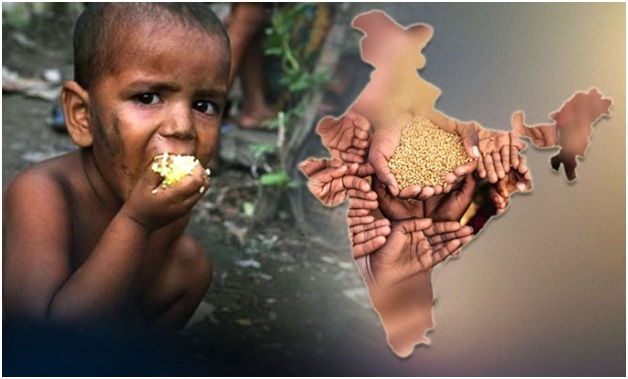
- 12 Oct 2023
Why in the News?
India ranks 111 out of a total of 125 countries in the Global Hunger Index (GHI) 2023, with its progress against hunger nearly halted since 2015, reflecting a global trend.
Key Findings of Global Hunger Index (GHI) 2023:
- India holds a Global Hunger Index score of 28.7 on a 100-point scale, categorizing its severity of hunger as "serious."
- The global GHI score for 2023 is 18.3, considered moderate.
- Latin America and the Caribbean stand out as the only region in the world where GHI scores have deteriorated between 2015 and 2023.
- South Asia and Africa South of the Sahara emerge as the global regions with the highest hunger levels, each having GHI scores of 27.0.
About the Global Hunger Index:
- The Global Hunger Index (GHI) is a tool designed to comprehensively measure and track hunger at global, regional, and national levels, reflecting multiple dimensions of hunger over time.
- The GHI is intended to raise awareness and understanding of the struggle against hunger, provide a way to compare levels of hunger between countries and regions and call attention to those areas of the world where hunger levels are highest and where the need for additional efforts to eliminate hunger is greatest.
- It is prepared jointly by Irish aid agency Concern Worldwide and the German organisation Welt Hunger Hilfe.
- How the GHI Is Calculated?
- Each country’s GHI score is calculated based on a formula that combines four indicators that together capture the multidimensional nature of hunger:
- Undernourishment: the share of the population whose caloric intake is insufficient;
- Child stunting: the share of children under the age of 5 who have low height for their age, reflecting chronic undernutrition;
- Child wasting: the share of children under the age of five who have low weight for their height, reflecting acute undernutrition; and
- Child mortality: the share of children who die before their 5th birthday, reflecting in part the fatal mix of inadequate nutrition and unhealthy environments.
- The indicators included in the GHI formula reflect caloric deficiencies as well as poor nutrition.
- The undernourishment indicator captures the food access situation of the population as a whole, while the indicators specific to children reflect the nutrition status within a particularly vulnerable subset of the population for whom a lack of dietary energy, protein, and/or micronutrients (essential vitamins and minerals) leads to a high risk of illness, poor physical and cognitive development, and death.
- The inclusion of both child wasting and child stunting allows the GHI to document both acute and chronic undernutrition.
- By combining multiple indicators, the index minimizes the effects of random measurement errors.
- These four indicators are all part of the indicator set used to measure progress toward the United Nations Sustainable Development Goals (SDGs)
Good Governance Day: Govt launches 3 new features on iGOT Mission Karmayogi platform (TOI)
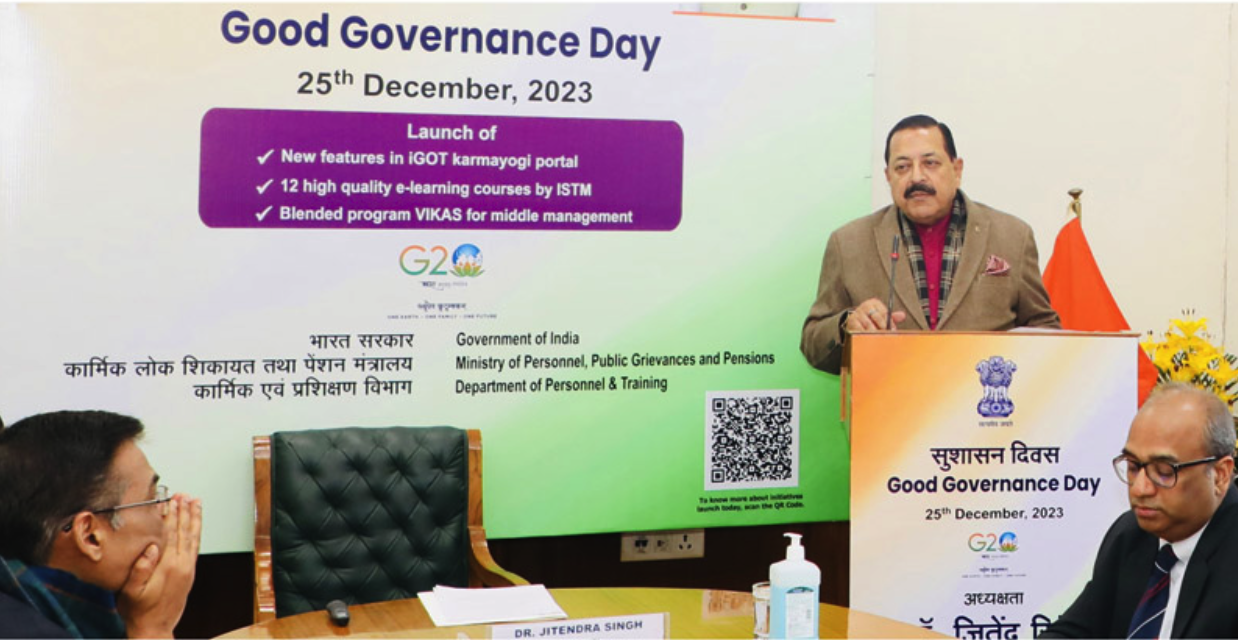
- 26 Dec 2023
Why is it in the News?
On the occasion of Good Governance Day, Union Minister Dr Jitendra Singh launched the Extended Version of Mission Karmayogi by introducing three new features on the iGOT Karmayogi platform that include My iGOT, Blended Programs and Curated Programs..
About Mission Karmayogi:
- Mission Karmayogi, the National Programme for Civil Services Capacity Building (NPCSCB), is geared towards equipping Civil Servants with enhanced creativity, constructiveness, and innovation, utilising transparency and technology to prepare them for future challenges.
- This innovative program serves as a cornerstone for the country's civil servants, emphasizing a balanced approach between 'on-site learning' and traditional 'off-site learning.'
- Approved by the Government on September 2, 2020, Mission Karmayogi encompasses six key pillars:
- Policy Framework
- Institutional Framework
- Competency Framework
- Digital Learning Framework (iGOT-Karmayogi)
- The electronic Human Resource Management System (e-HRMS), and
- The Monitoring and Evaluation Framework.
- Encompassing all civil servants, including contractual employees, across various ministries, departments, organizations, and agencies of the Union Government, the program introduces three new features on the iGOT Karmayogi platform:
- My iGOT: Delivers targeted training courses on the home page of individual officers, directly addressing their unique capacity-building needs identified in the Capacity-Building Plan for their Ministries/Departments.
- Blended Programs: Facilitates equitable access to training methodologies across all levels by integrating traditional offline (in-person) classroom courses with online learning components.
- This approach enables officers and faculty to benefit from both the flexibility of online courses and the invaluable interactions of face-to-face classroom sessions.
- Curated Programs: Designed to cater to diverse learning needs of Ministries/Departments and Training Institutions, offering a custom approach to address the specific requirements of different segments within the civil services.
Six armed poachers, timber mafia held by forest officials at Similipal National Park (New Indian Express)
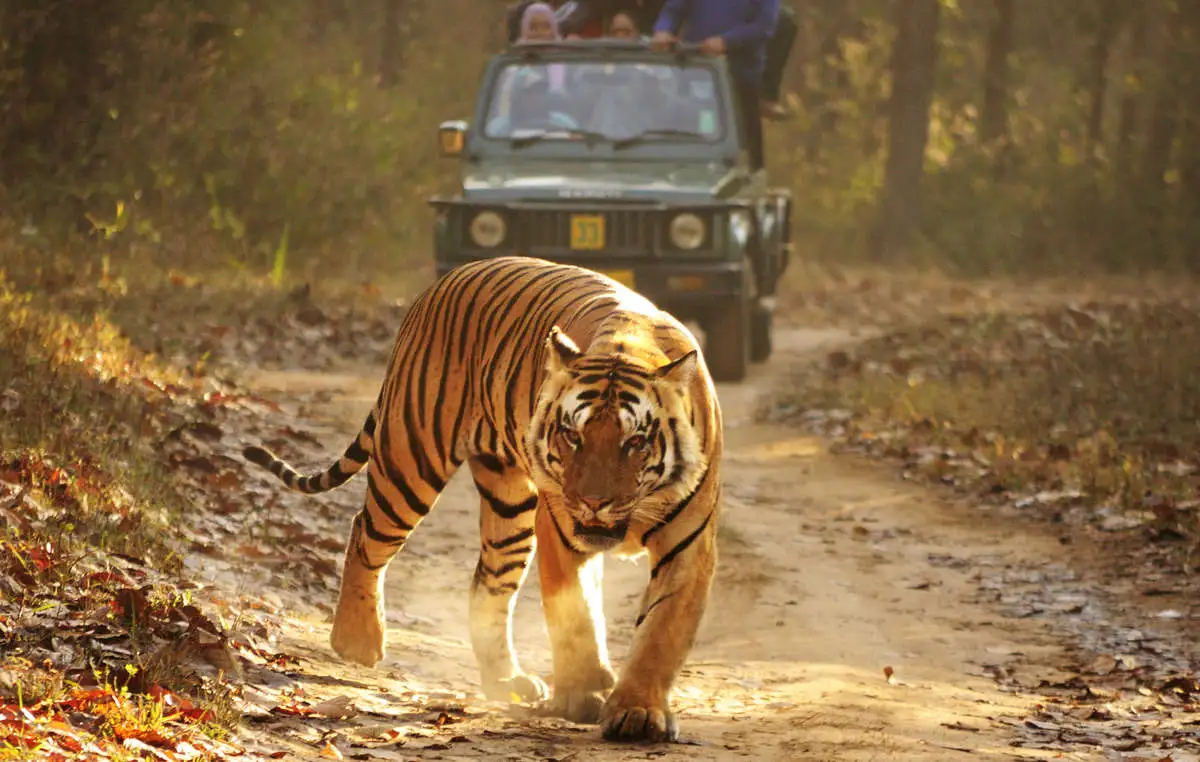
- 26 Dec 2023
Why is it in the News?
In a significant breakthrough, forest officials at Similipal National Park apprehended four armed poachers and two members of the timber mafia in separate locations on Saturday night.
About Similipal Tiger Reserve (STR):
- Similipal Tiger Reserve is located within the Mayurbhanj District, in the Northernmost part of Odisha.
- Declared a 'Tiger Reserve' in 1956, STR became a part of the national conservation initiative 'Project Tiger' in 1973.
- Recognized by UNESCO in 2009, STR, along with a transitional area covering 2250 sq. km, was included in the World Network of Biosphere Reserves.
- Terrain: Surrounded by high plateaus and hills, STR boasts the twin peaks of Khairiburu and Meghashini, reaching 1515m above mean sea level.
- The undulating and hilly terrain features open grasslands and wooded areas, with the inclined plateau rising abruptly from the low coastal plains.
- Hydrography: The region is crisscrossed with perennial water sources, contributing to rivers like Budhabalanga, Salandi, and various tributaries of the Baitarani River.
- Vegetation: STR encompasses a diverse mix of forest types and habitats, with Northern tropical moist deciduous dominating alongside semi-evergreen patches.
- Notably, it hosts the world's only landscape with melanistic tigers.
- Tribes: The vicinity of STR is inhabited by various tribes, including Kolha, Santhala, Bhumija, Bhatudi, Gondas, Khadia, Mankadia, and Sahara.
- Flora: Home to an impressive 1078 plant species, including 94 orchid species, STR is characterized by the dominance of Sal trees.
- Fauna: The reserve is home to a variety of wildlife, including leopard, gaur, elephant, langur, barking and spotted deer, sloth bear, mongoose, flying squirrel, porcupine, turtle, monitor lizard, python, sambar, pangolin, and more.
What is the Special Tiger Protection Force (STPF)?
- Realizing the importance of ‘tiger protection’ in biodiversity conservation, the Finance Minister announced policy initiatives in February 2008, for constituting the ‘Special Tiger Protection Force’ (STPF).
- Based on the one-time grant of Rs. 50 crore was provided to the National Tiger Conservation Authority (NTCA) for raising, arming and deploying a Special Tiger Protection Force, the proposal for the said force has been approved by the competent authority for 13 tiger reserves.
- The STPF has been made operational in the States of Karnataka (Bandipur), Maharashtra (Pench, Tadoba-Andhari, Nawegaon-Nagzira, Melghat), Rajasthan (Ranthambhore), Odisha (Similipal) and Assam (Kaziranga), out of 13 initially selected tiger reserves, with 60% central assistance under the ongoing Centrally Sponsored Scheme of Project Tiger (CSS-PT).
Goan Cashew (kernel) Got the Geographical Indication (GI) Tag (Indian Express)
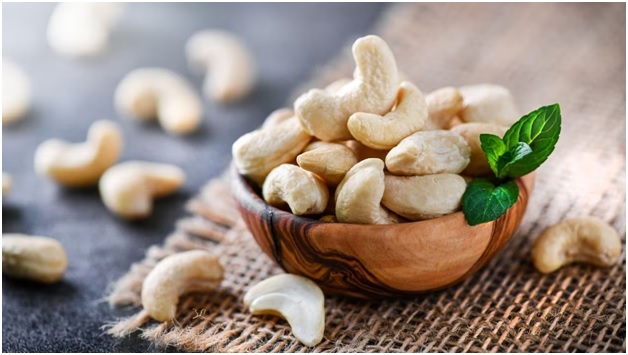
- 12 Oct 2023
Why in the News?
Goa Chief Minister Pramod Sawant hailed the recognition as a great opportunity for the cashew industry in the state and “a milestone towards the Swayampurna Goa mission”.
About Goan cashew:
- Cashew is one of the most important plantation crops in India, with significant cultivation in the state of Goa.
- Its introduction to India traces back to the 16th century (1570) when the Portuguese brought it from its native region in northeast Brazil, Latin America.
- Originally recognized for afforestation and soil conservation, cashews quickly gained prominence in Goa, occupying the largest area among horticultural crops.
- The climatic conditions conducive to its growth are well-suited to the Indian coastal areas, thriving under hot and humid circumstances.
Climatic Conditions:
- Soil and Climate: Well-drained deep sandy loam soils, ranging from sandy to laterite, prove to be ideal for cashew cultivation.
- Goa, known for its sandy loam, is a particularly favourable region for this crop.
- Adaptability: Cashew exhibits excellent adaptability to the coastal regions of India, thriving under temperatures ranging from 20 to 38 degrees Celsius.
- The relative humidity in the range of 60 to 95% is also conducive to its growth.
- Rainfall: Annual precipitation between 2000 to 3500mm supports the cultivation of cashews, ensuring optimal growth and development.
- Geographical Expansion: While traditionally associated with Goa, the cultivation of cashews is expanding to non-traditional areas in the plains of Karnataka, Madhya Pradesh, Chhattisgarh, and some parts of the Northeast hill region.
- Cashew's journey from its introduction by the Portuguese to becoming a vital crop in Goan agriculture highlights its adaptability and significance in the diverse agro-climatic regions of India.
What is a Geographical Indication Tag?
- A Geographical Indication (GI) tag is a distinctive emblem affixed to products originating from a specific geographical area, signifying unique qualities or a reputation inherently tied to that origin.
- Primarily employed for agricultural products, foodstuffs, wine and spirit drinks, handicrafts, and industrial items, the Geographical Indications of Goods (Registration and Protection) Act, 1999 in India aims to facilitate the registration and enhanced safeguarding of geographical indications associated with various goods.
- Under this act, the granted GI tag holds validity for a period of 10 years, with the provision for renewal upon expiration.
Union Health Minister Launches MedTech Mitra Platform to Empower Medical Technology Innovators (NewsOnAir)
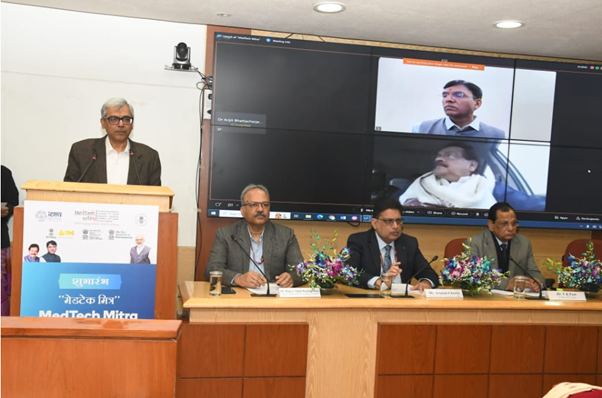
- 26 Dec 2023
Why is it in the News?
Union Health Minister Dr Mansukh Mandaviya has launched MedTech Mitra - a strategic initiative to empower MedTech innovators and advance healthcare solutions.
What is the MedTech Mitra Portal?
- The MedTech Mitra portal is an online platform designed to support medtech innovators by assisting in clinical evaluation, regulatory facilitation, and the adoption of new products in the medical technology sector.
- This collaborative initiative is overseen by the Indian Council of Medical Research (ICMR) and the Central Drugs Standard Control Organisation (CDSCO), operating under the direction/guidance of NITI Aayog’s Atal Innovation Mission.
Significance:
- In conjunction with recent policies and incentive schemes, such as the medical devices policy and the production-linked incentive scheme, the MedTech Mitra platform aims to catalyze growth in the medical devices sector and promote domestic manufacturing.
- These initiatives seek to foster the indigenous development of affordable and high-quality MedTech devices and diagnostics, thereby significantly reducing the sector's reliance on imports.
- The platform is envisioned to streamline the innovation process and facilitate research and development for emerging start-ups, ensuring a smoother journey from concept to product.
- By offering comprehensive guidance, including support for animal and clinical trials, the platform aims to bridge gaps for startups and promote ease of innovation.
- The MedTech Mitra portal is poised to foster collaborations between engineers, scientists, and clinicians, addressing a previously existing gap in partnerships within the sector.
About the Indian Council of Medical Research (ICMR):
- The Indian Council of Medical Research (ICMR) serves as the apex institution in India responsible for formulating, coordinating, and advancing biomedical research.
- With a primary mandate to conduct, coordinate, and implement medical research for societal benefit, ICMR is dedicated to translating medical innovations into tangible products and processes, subsequently integrating them into the public health system.
- Financial support for ICMR is provided by the Government of India through the Department of Health Research, Ministry of Health & Family Welfare.
AstroSat detects millisecond X-ray bursts from high magnetic field neutron stars (DD News)

- 26 Dec 2023
Why is it in the News?
India’s first multi-wavelength space-based observatory, AstroSat, has detected intense sub-second X-ray bursts emanating from a neutron star with an ultrahigh magnetic field, known as a magnetar.
What is X-ray Bursts?
- X-ray bursts manifest in low-mass X-ray binary systems featuring a neutron star and a low-mass main sequence star orbiting each other.
- The occurrence of these bursts is intricately linked to the gravitational dynamics of the neutron star and its companion.
- In this system, the proximity and intense gravitational forces of the neutron star cause the companion star to exceed its Roche-lobe, leading to the formation of an accretion disk around the neutron star.
- This disk becomes a repository for hydrogen drawn from the overflowing companion star.
- As hydrogen accumulates on the neutron star's surface, the extreme temperatures and pressures prevailing there catalyze its transformation into helium.
- This ongoing process results in the formation of a thin surface layer of helium.
- When this helium layer reaches a critical mass, a sudden explosive ignition occurs, elevating the entire neutron star's surface temperature to several tens of millions of degrees and releasing a burst of X-rays.
- Following the outburst, the binary system returns temporarily to a quiescent state, allowing the neutron star to reaccumulate the helium surface layer gradually.
- This cyclic process leads to the recurrence of X-ray bursts, typically unfolding at regular intervals separated by several hours or days.
About Indias’ AstroSat:
- AstroSat stands as India’s first dedicated multi-wavelength space observatory, pioneering a mission focused on the simultaneous study of celestial sources across X-ray, optical, and UV spectral bands.
- Launched with a lift-off mass of 1515 kg, AstroSat took flight aboard the Indian launch vehicle PSLV from the Satish Dhawan Space Centre in Sriharikota on September 28, 2015.
- It entered a 650 km orbit, inclined at an angle of 6 degrees to the equator.
- The Mission Operations Complex (MOX) at ISRO Telemetry, Tracking and Command Network (ISTRAC) in Bengaluru oversees the satellite throughout its mission life.
- With a minimum useful life of around 5 years, AstroSat is dedicated to achieving the following scientific objectives:
- Understanding high-energy processes in binary star systems housing neutron stars and black holes.
- Estimating magnetic fields associated with neutron stars.
- Investigating star birth regions and high-energy processes in star systems beyond our galaxy.
- Detecting new, briefly bright X-ray sources in the celestial sphere.
- Conducting a limited deep-field survey of the Universe in the Ultraviolet region.
India shedding mentality of slavery, says PM Modi (The Hindu)
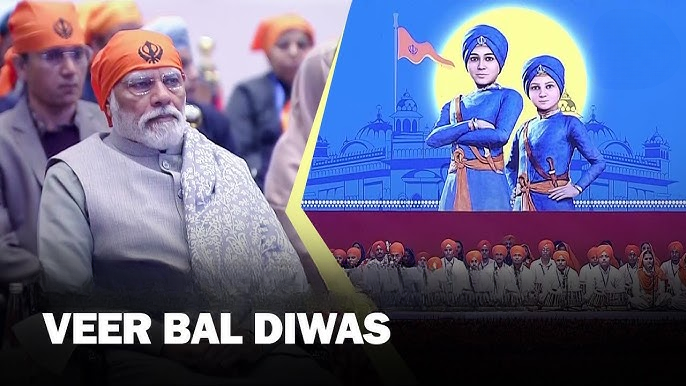
- 26 Dec 2023
Why is it in the News?
Speaking at a "Veer Bal Diwas" event to commemorate the martyrdom of two sons of Guru Gobind Singh, PM Modi said their sacrifices are not only being remembered in India but also globally through programmes in other countries as well
About Veer Bal Diwas:
- Veer Bal Diwas is observed annually on December 26th to commemorate the valour and sacrifice of the four sons of Guru Gobind Singh, the tenth Sikh guru.
- The four sons, named Zorawar Singh, Fateh Singh, Jai Singh, and Kulwant Singh, played a significant role in resisting the Mughal emperor Aurangzeb and his army.
- Zorawar Singh and Fateh Singh were captured by the Mughals at the ages of six and nine, respectively, after defending the fort of Anandpur Sahib from a siege.
- Subsequently, they were taken to Sirhind, where, steadfast in their faith, they refused to convert to Islam and were sentenced to a tragic death by being bricked alive in 1705.
- Jai Singh and Kulwant Singh, also captured at Anandpur Sahib, managed to escape from Sirhind with the assistance of loyal followers.
- They later joined their father in his final battle at Sirhind, where Guru Gobind Singh was wounded by a musket shot.
- The unwavering courage and sacrifice of Guru Gobind Singh's sons became a symbol of inspiration for generations of Sikhs, reflecting their dedication to the cause of Sikhism.
About Guru Gobind Singh:
- Guru Gobind Singh, the last of the ten Sikh Gurus, was born on December 22, 1666, in Patna, Bihar.
- His birth anniversary is observed according to the Nanakshahi calendar.
- Assuming the role of Sikh Guru at the tender age of nine after the passing of his father, Guru Tegh Bahadur, he served until his assassination in 1708.
Contributions:
- Religious: Guru Gobind Singh made profound contributions to the Sikh religion, introducing practices such as wearing a turban to cover hair.
- He laid the foundation for the Khalsa (1699), embodying the Five 'K's: kesh (uncut hair), kanga (wooden comb), kara (iron or steel bracelet), kirpan (dagger), and kachera (short breeches).
- These articles of faith became integral to the identity of a Khalsa.
- Establishing various rules for Khalsa warriors, including abstaining from tobacco, alcohol, and halal meat, Guru Gobind Singh emphasized their duty to protect innocent people from persecution.
- Guru Gobind Singh designated Guru Granth Sahib as the spiritual guide for both the Khalsas and Sikhs.
- Martial: Engaging in the battle of Muktsar in 1705, Guru Gobind Singh fiercely opposed the Mughals.
- The Battle of Anandpur in 1704 resulted in the tragic loss of the Guru's mother and two minor sons, who were executed. His eldest son also fell in battle.
- Literary: Guru Gobind Singh's legacy includes compositions like Jaap Sahib, Benti Chaupai, and Amrit Savaiye.
- Notably, he wrote the Zafarnama, a letter addressed to the Mughal Emperor Aurangzeb, showcasing his literary prowess and resilience.
‘Dunki’ and immigration: How the first modern passports came to be (Indian Express)
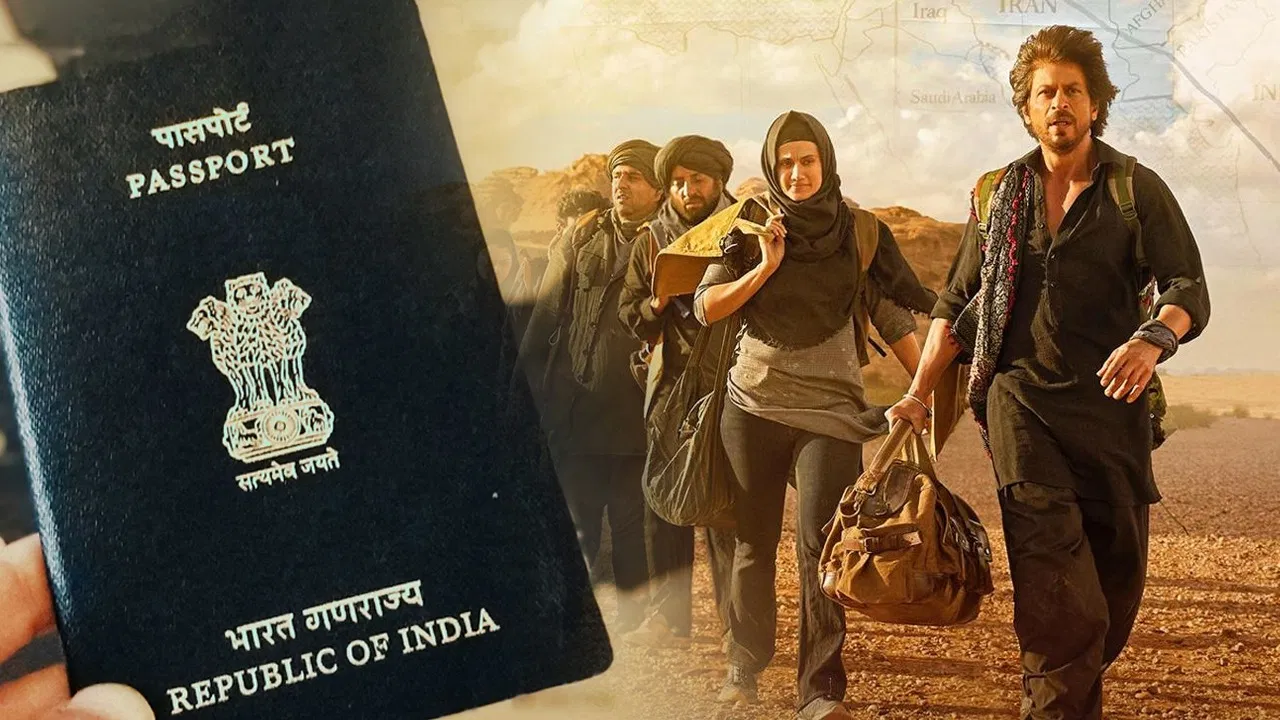
- 23 Dec 2023
Why is it in the News?
The recently released Shah Rukh Khan’s movie ‘Dunki’ is said to be based on the ‘donkey route’ or ‘donkey flight’ that lakhs of Indians take to reach countries like the US, the UK or some other European countries.
What is a Donkey Journey?
- Dunki is the Punjabi idiom that means to "hop from place to place", according to the Migration Policy Institute (MPI).
- It is a colloquial term for "donkey flights" or the "donkey flights method", which is a dangerous illegal immigration technique involving crossing a country's borders through a backdoor route via multiple stops in other countries.
How does the donkey flight method or dunki work?
- The desire for a higher quality of life has given rise to an industry driven by "agents" who charge exorbitant fees to help smuggle people to the country of their choice.
- Some agents may even run legitimate businesses while offering this dangerous option.
- The agents can offer various services, from fake papers to help through otherwise legal migration processes to smuggling people through ship containers.
Which countries are most targeted using the Dunki method?
- While donkey flight can be used to enter any country, the US, Canada, and the UK are some of the most popular destinations undertaken by Indian immigrants.
- According to a report, between February 2019 and March 2023, as many as 149,000 Indians were detained for attempting to enter the US illegally.
- Of this, most of those detained were from Gujarat and Punjab.
Risks involved in the dunki method:
- Dunki comes with tremendous risks, including the risk of capture, imprisonment, and deportation.
- When facilitated by an agent, the system is highly exploitative.
- Many sell off their assets, including ancestral land, to pay these agents.
- Agents may also withhold people's passports or other important documents to extort more money and assets.
- Moreover, smuggled migrants are also more vulnerable to becoming victims of other crimes during the smuggling process.
- The terrains of the places through which immigrants may have to travel pose a range of risks, including harsh weather conditions, rugged terrains, and access to basic resources like food and water.
- It must be noted that migrant smuggling is not the same as human trafficking.
- However, these crimes may sometimes interlink, adding another layer of risk for those engaging in illegal immigration.
About Passports:
- Rooted in history, passports trace back to mentions in the Hebrew Bible and structured systems in nations like France and the UK.
- The evolution into modern passports was catalyzed by the British Nationality and Status of Aliens Act in 1914, introducing features such as photographs and distinctive characteristics.
- The League of Nations' 1920 conference sought to standardize passport regulations, contributing to the establishment of a common British system.
- During the 1920s, the United States linked immigration laws to passports, imposing limitations on inflows.
- Despite initial reservations, passports have persisted as an integral element of contemporary citizenship.
- Indian Passports: The initiation of issuing Indian passports dates back to the First World War (1914-1918) through the Defence of India Act, as mandated by the British government for travel.
Assam-Meghalaya panels for boundary dispute to submit reports by December 31 (The Hindu)
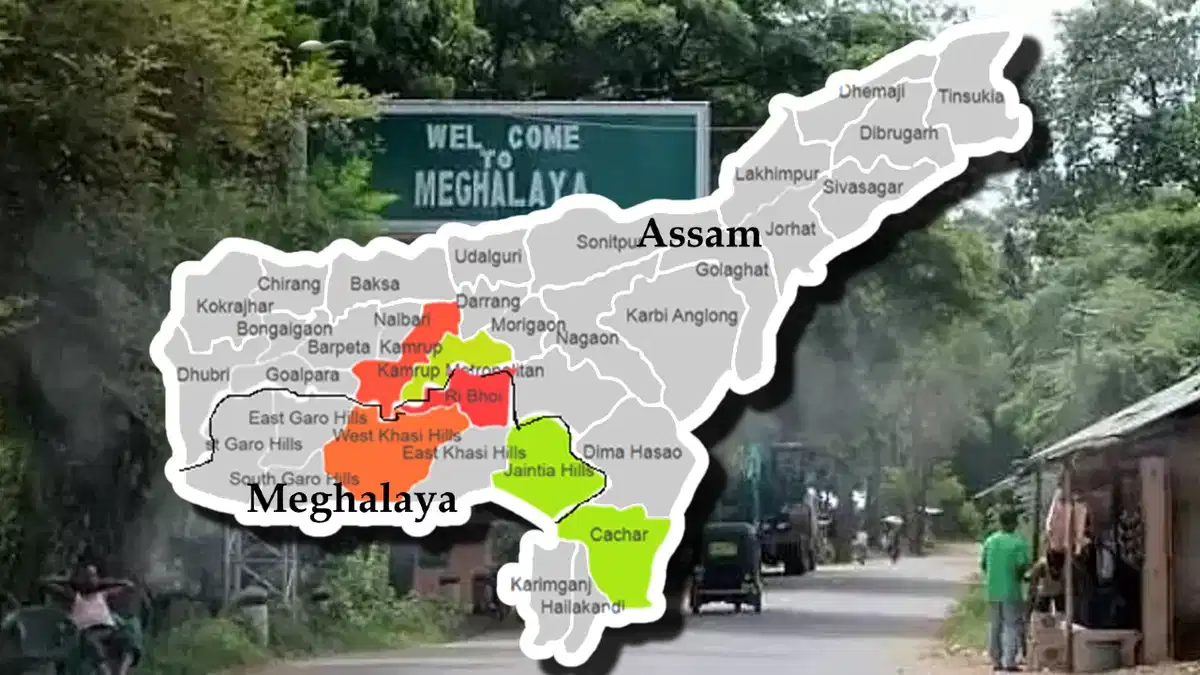
- 23 Dec 2023
Why is it in the News?
The regional committees on the boundary dispute between Assam and Meghalaya have been asked to submit their reports by December 31, a Meghalaya government official said on Friday, December 22.
What is the Assam-Meghalaya Border Dispute?
- The Assam and Meghalaya have a longstanding dispute in 12 stretches of their 884-km shared border.
- The areas include Upper Tarabari, Gazang Reserve Forest, Hahim, Langpih, Borduar, Boklapara, Nongwah, Matamur, Khanapara-Pilangkata, Deshdemoreah Block I and Block II, Khanduli, and Retacherra.
Historical Context:
- During British rule, undivided Assam encompassed present-day Nagaland, Arunachal Pradesh, Meghalaya, and Mizoram.
- Meghalaya was delineated in 1972, following the Assam Reorganisation (Meghalaya) Act of 1969, but differing interpretations of the border emerged.
- In 2011, Meghalaya identified 12 disputed areas, covering approximately 2,700 sq km.
Key Point of Contention:
- A focal point of discord is Langpih in West Garo Hills, bordering Kamrup district in Assam.
- Post-Independence, Langpih transitioned from Kamrup district to Garo Hills and Meghalaya.
- Assam contends it's part of the Mikir Hills, while Meghalaya questions the inclusion of Blocks I and II of the Mikir Hills (now Karbi Anglong) in Assam.
Efforts to Resolve Dispute:
- In 1985, an official committee, led by former Chief Justice of India Y V Chandrachud, was formed but didn't yield a resolution.
- Both states identified six out of 12 disputed areas for resolution, resulting in a Memorandum of Understanding in March 2022.
- The second round of discussions for the remaining areas commenced in November 2022.
Potential Solutions:
- Utilizing satellite mapping for precise border demarcation.
- Leveraging constitutional provisions like Article 263 for the Inter-state Council to advise on disputes and coordinate policies.
- Reviving Zonal Councils to address common concerns among states in each zone, including border disputes and economic planning.
- Embracing the spirit of cooperative federalism to strengthen India's unity in diversity.
IIT Guwahati researchers devise mathematical model to help prevent riverbank erosion (Indian Express)
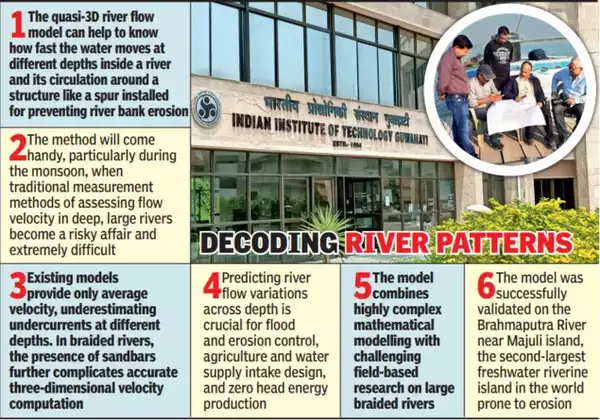
- 23 Dec 2023
Why is it in the News?
A team of researchers at the Indian Institute of Technology (IIT) Guwahati has developed a new award-winning mathematical model to help prevent erosion of rivers like Brahmaputra.
What is BRAHMA-2D?
- BRAHMA-2D (Braided River Aid: Hydro-Morphological Analyzer) is a sophisticated mathematical model designed for assessing the flow dynamics of expansive braided rivers such as the Brahmaputra.
- Functioning as a quasi-3D river flow model, BRAHMA-2D offers insights into water velocity at various depths within the river and the circulation patterns around structures like spurs, crucial for preventing river bank erosion.
- Developed through collaboration between researchers at IIT Guwahati and the Brahmaputra Board under the Union Ministry of Jal Shakti, this innovative model plays a pivotal role in the design of sustainable hydraulic structures.
- Engineers can leverage BRAHMA-2D to create effective structures like spurs, river bends, and other protective measures to combat river bank erosion.
- The model's successful validation on the Brahmaputra River near Majuli Island in Assam, a region prone to river bank erosion, underscores its practical applicability.
- BRAHMA-2D integrates a two-dimensional water movement model with entropy theory, focusing on disorder or randomness.
- Notably, it identifies a unique dip phenomenon near spurs, where water flows underneath intensifies—a phenomenon absent at points away from these structures.
- Beyond erosion prevention, BRAHMA-2D extends its utility to environmental studies by assessing the habitat suitability of aquatic species, particularly endangered ones.
- This assessment is based on factors such as required depth and flow velocity, showcasing the model's versatility in addressing multifaceted challenges in river ecosystems.
About Brahmaputra River:
- Originating as Siang or Dihang from the Chemayungdung glacier in the Kailash range near Mansarovar Lake, the Brahmaputra enters India to the west of Sadiya town in Arunachal Pradesh.
- Tributaries: Dibang, Lohit, Siang, Burhi Dihing, Tista, and Dhansari contribute to its flow.
- This perennial river exhibits distinctive features influenced by its geography and prevailing climatic conditions.
- Experiencing biannual flooding, the first occurs from the melting Himalayan snow in summer, and the second is a consequence of monsoon flows.
- Climate change has amplified the frequency and intensity of these floods, posing a threat to populations and food security in the lower riparian states of India and Bangladesh.
- Known for its dynamism, the Brahmaputra undergoes frequent changes in course, driven by landslides and geological activities.
Three heritage projects in Punjab and Haryana bag UNESCO Asia-Pacific Awards 2023 (Business Standard)
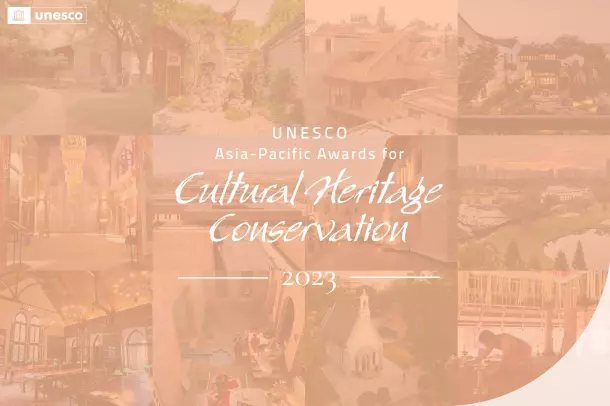
- 23 Dec 2023
Why is it in the News?
The resilient urban revitalisation of Rambagh Gate and Ramparts in Punjab, and heritage conservation projects related to Haryana's Church of Epiphany and Delhi's Bikaner House won Unescoawards on Thursday.
About Rambagh Gate & Ramparts:
- A three-story architectural marvel, the Rambagh Gate underwent meticulous restoration employing traditional building techniques.
- Locally sourced materials, including Nanak Shahi bricks set in lime mortar, were integral to the restoration process.
About Pipal Haveli, Gurdaspur:
- Pipal Haveli in Gurdaspur stands as a testament to ecological and traditional building methods, incorporating locally sourced materials and embracing vernacular architectural language.
- Notably, it actively promotes women's empowerment through initiatives like the BaRi Collective, offering programs that enhance women's livelihoods through environmentally conscious craft practices.
What is the UNESCO Asia-Pacific Awards for Cultural Heritage Conservation?
- UNESCO aims to promote private sector engagement and foster collaborations between the public and private sectors to preserve the cultural heritage of the Asia-Pacific region for the benefit of present and future generations.
- Since the year 2000, the UNESCO Asia-Pacific Awards for Cultural Heritage Conservation have been acknowledging the accomplishments of private sector entities and public-private initiatives in effectively conserving or restoring structures, places, and properties of significant heritage value in the region.
- Noteworthy, among the recognized sites, five are located in China, six in India, and one in Nepal.
- Highlights of Award-Winning Sites in India:
- Rambagh Gate in Amritsar: Received the prestigious "Award of Excellence," the highest recognition across all categories.
- Pipal Haveli in Punjab: Honored for its sustainable development as a heritage rural homestay.
- Karnikara Mandapam at Kunnamangalam Bhagawati Temple in Kerala: Earned the esteemed "Award of Distinction."
- Epiphany in Haryana, David Sassoon Library and Reading Room in Mumbai, and Bikaner House in New Delhi: Recognized with the "Award of Merit" for their outstanding contributions to cultural heritage conservation.
CISF to take over security of Parliament complex after Lok Sabha breach | What's the plan (Indian Express)
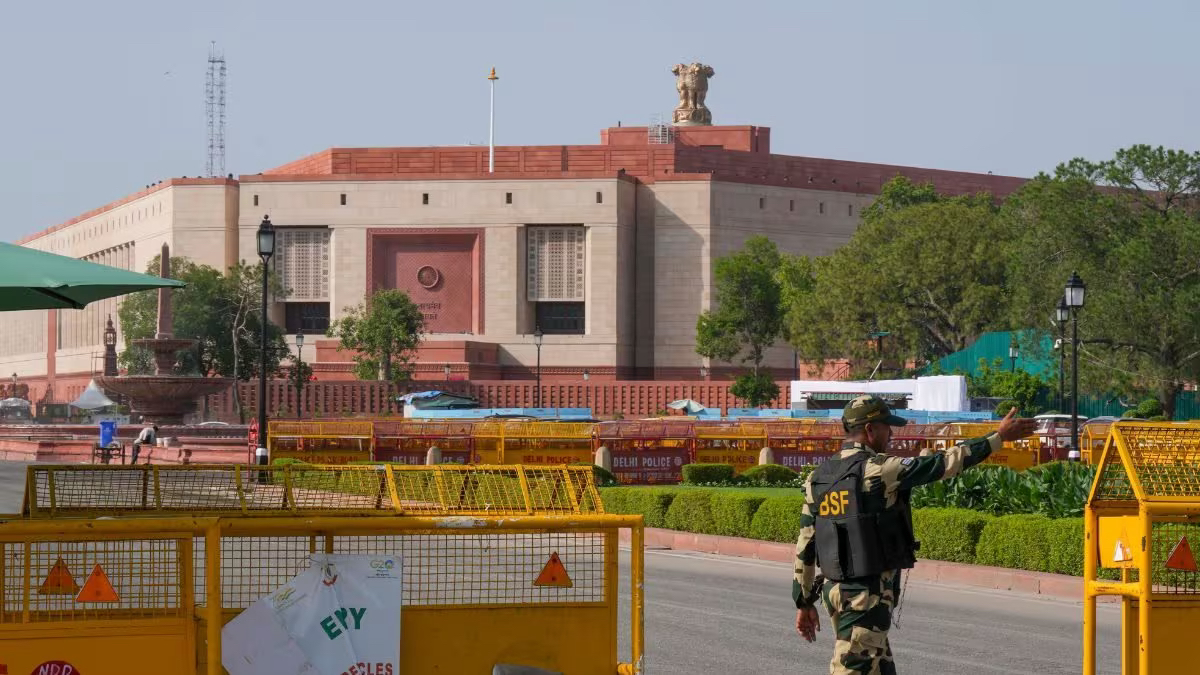
- 23 Dec 2023
Why is it in the News?
The Union Home Ministry has approved the deployment of the Central Industrial Security Force (CISF) in the Parliament complex, according to a government order.
News Summary:
- Following the security breach on December 13, the Union Home Ministry has given the green light for CISF deployment in the Parliament complex.
- Collaborating with Parliament Security Services, CISF will oversee access control for both the new and old Parliament buildings.
What are the Current Security Arrangements in Parliament?
- The Delhi Police currently handles access control, including frisking and baggage scanning.
- In response to the recent incident, eight Delhi Police security personnel responsible for these duties were suspended.
- In the event of armed intervention, the Parliament Duty Group (PDG), an armed unit of the Central Reserve Police Force (CRPF), is deployed.
- The overall responsibility for security lies with the Parliament Security Service under the Lok Sabha Speaker.
About Central Industrial Security Force (CISF):
- Established under the Central Industrial Security Force Act, 1968, CISF is a key Central Armed Police Force (CAPF).
- Initially formed in 1969 with three battalions, it has evolved into a versatile organization boasting a current strength of 1,63,590 personnel.
- Operating under the administrative purview of the Ministry of Home Affairs, CISF's headquarters is situated in New Delhi.
Key Operations:
- Critical Infrastructure Protection: Safeguarding 353 establishments nationwide, including Atomic Power Plants, Space Installations, Defence Production Units, Mines, Oil Fields, and Refineries.
- Fire Protection: Maintaining a dedicated Fire Wing catering to 104 establishments for fire safety services.
- VIP Security: Mandated to provide security to VIP protectees categorized as Z+, Z, Y, and X across the country.
- Airport Security: Entrusted with the specialized task of airport security since 2000, following the hijacking of Indian Airlines Flight IC-814 to Kandahar.
- Private Sector Security: Authorized by an amendment to the CISF Act, the force offers security services, on a payment basis, to vital private and joint venture industrial entities contributing to the nation's security and economy.
- Examples include Infosys campuses, Patanjali Food and Herbal Park, and the Reliance refinery.
- Overseas Deployment: Contributing contingents to the United Nations Stabilization Mission in Haiti (MINUSTAH).
- CISF stands out as the only Central Armed Police Force with a daily public interface, playing a crucial role in securing airports, the Delhi Metro, and iconic monuments.
NSG Takes on Invasive Vilayati Kikar/Prosopis Juliflora (Indian Express)
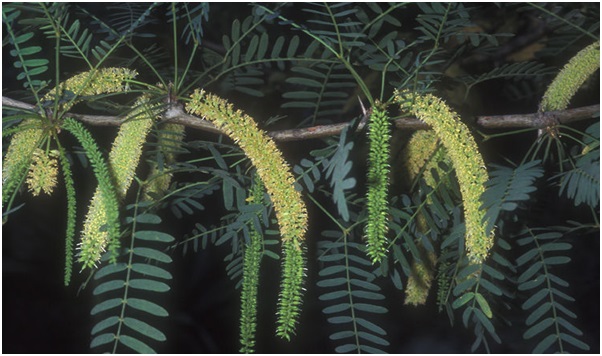
- 11 Oct 2023
Why in the News?
The National Security Guard (NSG) is actively combating the encroachment of the invasive plant species known as vilayati kikar at its Manesar campus, situated near the Delhi-Ajmer highway.
What is Prosopis Juliflora?
- Prosopis juliflora, a shrub or small tree belonging to the Fabaceae family and classified as a type of mesquite, is indigenous to Mexico, South America, and the Caribbean.
- Introduced to Delhi by the British in the 1920s during the construction of the national capital, this species is locally known by various names in India, including Bellary jaali, seemai karuvelam, seemai jaali, gando baval, and vilayati kikar.
- Known for its high ecological adaptability, Prosopis juliflora can thrive in diverse soil types, ranging from sand dunes to clay, and from saline to alkaline soils.
- It exhibits a wide altitude range, growing below 200 to above 1500 meters above sea level, with a mean annual rainfall varying from 50 to 1500 mm.
- However, despite its adaptability, it is recognized as an invasive plant with a propensity for vigorous growth, enabling it to outcompete indigenous plant species.
Impacts on the Environment: This invasive species pose significant environmental challenges:
- Prosopis juliflora absorbs more than four litres of water to produce one kilogram of biomass.
- The plant generates less oxygen and more carbon dioxide, making it less conducive to supporting bird habitats.
- It has the potential to contaminate groundwater, posing risks to the overall quality of this vital resource.
- The species contributes to land erosion by displacing grasslands that serve as habitats for native plants and animals.
- The invasive nature of Prosopis juliflora raises concerns about its ecological impact and necessitates efforts to manage and control its spread in affected regions.
Govt Notifies Changes in PLI Scheme for White Goods (Business Standard)

- 11 Oct 2023
Why in the News?
The central government has introduced changes to the rules governing the production-linked incentive (PLI) scheme for white goods, specifically air conditioners and light-emitting diode lights, with the goal of ‘simplifying the scheme’s operations’ and promoting the ease of doing business, according to an official statement on Wednesday.
What are White Goods?
- Major home appliances, commonly known as white goods, encompass substantial household devices like stoves, refrigerators, freezers, washing machines, tumble dryers, dishwashers, and air conditioners.
- While these durable consumer durables were initially available only in white, contemporary options offer a variety of colours, yet they persistently retain the term "white goods."
- Renowned for their robustness and extended lifespan, white goods are engineered to endure the rigours of daily use.
- Additionally, the term "white goods" may extend to white fabrics, particularly linen or cotton, including items like curtains, towels, or sheets, which historically were crafted from white cloth.
- In the beverage industry, the term "white goods" refers to colourless spirits such as vodka or gin.
What is Brown Goods?
- Brown goods refer to relatively lightweight electronic consumer durables, including computers, digital media players, TVs, and radios.
- In contrast to large household appliances (white goods), brown goods are primarily geared towards entertainment, communication, and convenience.
- Typically featuring electronic components, these devices are designed to deliver audio, video, or data-related services as their primary functions.
What is Grey Goods?
- When a commodity is traded through distribution channels, which are unofficial but legal are known as the grey goods.
- They are goods that are traded in a specific area, where the manufacturer does not intend to sell the product, but with different specifications.
- Grey goods are sold without the knowledge of the original manufacturer.
- They are typically less costly than the ones that are available by the authorised distributor.
- Also, they might be made to pertain to some jurisdiction.
- Example: A factory-unlocked version of the iPhone. It is made to suit US standards but is sold in India for a lesser price than the iPhone made for Indian standards.
- When it comes to such Grey goods, the manufacturer does not provide any warranty for the product.
Migratory Birds Arrive in Odisha’s Chilika Before Winter (DownToEarth)
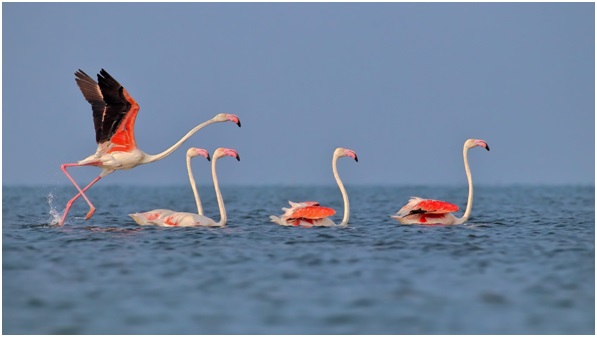
- 11 Oct 2023
Why in the News?
Migratory birds have started their annual journey to Chilika Lake—India’s largest waterbird habitat in Odisha — ahead of winter this year.
About Chilika Lake:
- Chilika Lake is the largest brackish water lake and a shallow lagoon with estuarine character spread across the districts of Puri, Khurda and Ganjam in the state of Odisha in eastern India.
- It is considered to be the largest lagoon in India and is counted amongst the largest lagoons in the world.
- It is the largest wintering ground for migratory waterfowl found anywhere on the Indian sub-continent.
- It is one of the hotspots of biodiversity in the country, and some rare, vulnerable and endangered species listed in the IUCN Red List of threatened Animals inhabit the Lake area for at least part of their life cycle.
- On account of its rich bio-diversity, Chilika Lake was designated as a "Ramsar Site", i.e. a wetland of International Importance.
- The Nalaban Island within the lake is notified as a Bird Sanctuary under the Wildlife (Protection) Act, 1972.
- The National Wetlands, Mangroves and Coral Reefs Committee of the Ministry of Environment & Forests, Government of India, have also identified the lake as a priority site for conservation and management.
- The Lake is a highly productive ecosystem, with rich fishery resources.
- The rich fishing grounds sustain the livelihood of more than 0.2 million fisherfolk who live in and around the lake.
- It has a great heritage value and maritime trade to the far east countries used to take place from here.
- It is the largest winter ground of migratory birds in the Indian sub-continent and home to more than 150 highly threatened Irrawaddy dolphins, which is the largest lagoonal population globally.
- It supports some of the largest congregation of migratory birds from large parts of Asia, particularly during the winters that arrive from as far as the Caspian Sea, Lake Baikal, Aral Sea, remote parts of Russia, Kirghiz steppes of Mongolia, Central and South East Asia, Ladakh and the Himalayas to feed and breed in its fertile waters.
NASA Recently Shared a Satellite Image of Deception Island (Tribune India)
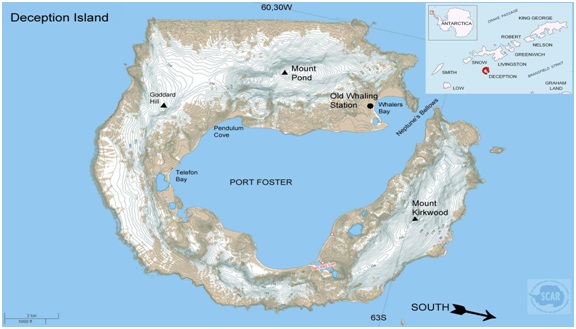
- 11 Oct 2023
Why in the News?
National Aeronautics and Space Administration (NASA) recently shared a satellite image of Deception Island, one of the only places in the world where a ship can sail directly into the centre of an active volcano.
About Deception Island:
- Deception Island is situated within the South Shetland Islands, forming part of an archipelago northwest of the Antarctic Peninsula.
- This volcanic island is notable for its dynamic features and distinct geography.
- Originating from a colossal volcanic eruption, Deception Island's formation resulted in the collapse of its central structure, allowing seawater to inundate the resulting caldera.
- The landscape is characterized by desolate volcanic slopes, steaming beaches, and glaciers adorned with ash layers, creating a unique horseshoe-shaped entrance to the sea via Neptune’s Bellows.
- The island encircles Port Foster, recognized as one of the safest harbours in the Antarctic, offering vessels a rare opportunity to navigate into the heart of an active volcano.
- Among the few places globally where this is possible, Deception Island has experienced over twenty eruptions since the 19th century.
- Notably, the island witnessed three volcanic eruptions from 1967 to 1970, leading to the destruction of Chilean and British stations.
- Presently, Argentina and Spain maintain summer scientific stations on the island.
- Deception Island is safeguarded under the Antarctic Treaty, designating it as a protected area with restricted human visits and minimized environmental impact.
Cabinet Approves Establishment of an Autonomous Body Mera Yuva Bharat (PIB)
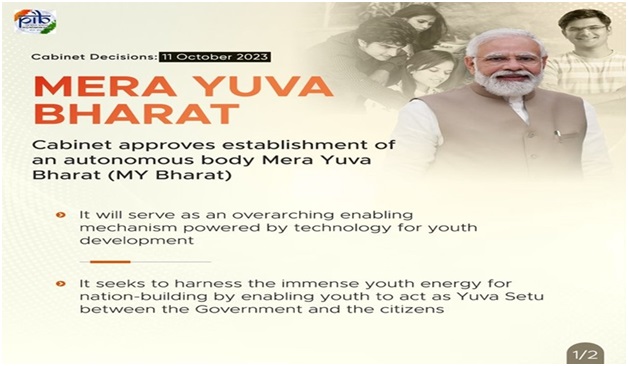
- 11 Oct 2023
Why in the News?
The Union Cabinet, chaired by Prime Minister Shri Narendra Modi, has approved the establishment of an autonomous body Mera Yuva Bharat (MY Bharat).
About Mera Yuva Bharat (MY Bharat):
- Mera Yuva Bharat (MY Bharat), an autonomous body will benefit the youth in the age group of 15-29 years, in line with the definition of ‘Youth’ in the National Youth Policy.
- In the case of programme components specifically meant for adolescents, the beneficiaries will be in the age group of 10-19 years.
- It will help in Setting the focus of the Government on youth-led development and to make the Youth “active drivers” of development and not merely “passive recipients”.
- It will be launched on 31st October 2023 on National Unity Day.
Objective:
- The primary objective of Mera Yuva Bharat (MY Bharat) is to make it a whole of Government platform for youth development.
- With access to resources & connection to opportunities, youth would become community change agents and nation builders allowing them to act as the Yuva Setu between the Government and the citizens.
- It seeks to harness the immense youth energy for nation-building.
The establishment of Mera Yuva Bharat (MY Bharat) would lead to:
- Leadership Development in the Youth:
- Improve leadership skills through experiential learning by shifting from isolated physical interaction to programmatic skills.
- Investing more in youth to make them social innovators, and leaders in the communities.
- Setting the focus of the Government on youth-led development and making the Youth “active drivers” of development and not merely “passive recipients”.
- Better alignment between youth aspirations and community needs.
- Enhanced efficiency through Convergence of existing programmes.
- Act as a one-stop shop for young people and Ministries.
- Create a centralized youth database.
- Improved two-way communication to connect youth government initiatives and activities of other stakeholders that engage with youth.
- Ensuring accessibility by creating a digital ecosystem.
Why There is a Need for Such Initiative?
- India’s youth are to play a critical role in defining the future of the nation.
- There is a need to establish a new contemporary technology-led platform for the Government to engage with the present-day youth.
- Ensuring accessibility by creating a digital ecosystem
- Mera Yuva Bharat supported by a technology platform would help to increase the Youth outreach efforts of the Department of Youth Affairs.
Mukundra Hills Tiger Reserve in Rajasthan Now Opens for Safari Tours (TOI)
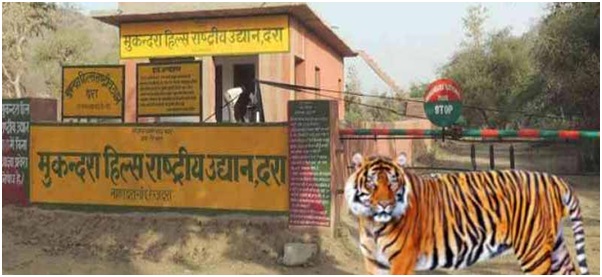
- 10 Oct 2023
Why in the News?
The forest department started the inaugural jungle safari at the Mukundra Hills Tiger Reserve on Monday, which marks the beginning of organised tiger reserve tours for tourists in four locations across the state.
About Mukundra Hills Tiger Reserve:
- Location: Mukundra Hills Tiger Reserve, also known as Darrah Wildlife Sanctuary, spans across four districts – Bundi, Kota, Jhalawar, and Chittorgarh in Rajasthan.
- The reserve is nestled in a valley formed by two parallel mountains, Mukundra and Gargola.
- Establishment: In 2013, the tiger reserve was formed, encompassing Mukandra National Park, Dara Sanctuary, Jawahar Sagar Sanctuary, and a section of Chambal Sanctuary.
- Initially, it served as a hunting preserve for the Maharaja of Kota.
- River: Positioned on the eastern bank of the Chambal River, the reserve is crisscrossed by its tributaries.
- Vegetation: The reserve features a Dry Deciduous Forest.
- Flora: The dominant species is Kala Dhok or Kaladhi (Anogeissus pendula), accompanied by Khair, Ber, Kakan, Raunj, and more.
- On elevated slopes, Anogeissus pendula gives way to Anogeissus latifolia, coexisting with Bel, Salar, Uum, and Shisham.
- Fauna: Noteworthy fauna include Leopard, Sloth bear, Nilgai, Chinkara, Spotted Deer, Small Indian Civet, Toddy Cat, Jackal, Hyena, Jungle Cat, and Common Langur, among others.
- The region is also home to various reptiles and amphibians, such as Pythons, Rat Snake, Buff-striped keelbacks, Green keelbacks, crocodiles, turtles, Gharial and Otters.
Periodic Labour Force Survey (PLFS) Says Unemployment Rate Declined (The Hindu)
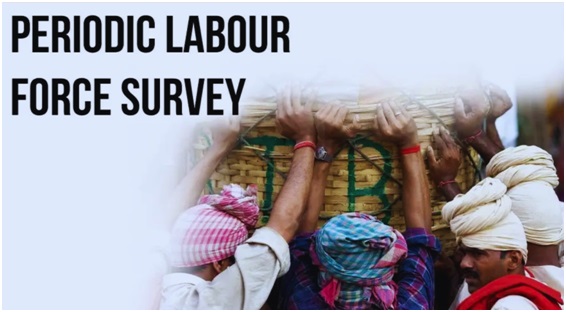
- 10 Oct 2023
Why in the News?
The Periodic Labour Force Survey (PLFS) has reported that the unemployment rate in the country has shown a decrease between April and June 2023.
Key Observations of the Periodic Labour Force Survey (PLFS):
- Improved Work Metrics: Both the Labour Force Participation Rate (LFPR) and Worker-Population Ratio (WPR) showed positive trends in the recent period.
- Urban Employment Trends: In urban areas, LFPR increased from 47.5% (April-June 2022) to 48.8% (April-June 2023) for individuals aged 15 and above.
- The WPR in urban areas rose from 43.9% (April-June 2022) to 45.5% in the corresponding months this year.
- Gender-specific Changes:
- Male LFPR increased from 68.3% to 69.2%.
- Female LFPR showed notable growth from 18.9% to 21.1% during the observed period.
What is the Periodic Labour Force Survey (PLFS):
- Conducted by the National Sample Survey (NSO) under the Ministry of Statistics and Programme Implementation (MoSPI).
- Launched in April 2017 by the National Statistical Office (NSO) to provide more frequent labour force data.
Objectives:
- Estimate key employment and unemployment indicators every three months for urban areas.
- Annually estimate indicators for both 'Usual Status' and 'Current Weekly Status' in rural and urban areas.
- Key Indicators:
- Labour Force Participation Rate (LFPR): Percentage of individuals in the population who are part of the labour force (working, seeking, or available for work).
- Worker Population Ratio (WPR): Percentage of employed persons in the population.
- Unemployment Rate (UR): Percentage of unemployed persons among those in the labour force.
- Current Weekly Status (CWS): Activity status determined based on the activities in the last 7 days before the survey.
India to Hold Satellite Spectrum Auctioning (The Hindu BusinessLine)

- 10 Oct 2023
Why in the News?
The Elon Musk vs Mukesh Ambani battle on whether to auction or allocate satellite spectrum has attracted intervention from the Prime Minister’s Office (PMO).
What is Satellite Spectrum?
- The satellite spectrum is like a special section of radio waves reserved for satellites when they're up in space.
- It's part of the larger family of radio waves that we use for things like Wi-Fi, TV, and radio.
- This spectrum serves as a vital resource for countries, facilitating satellite broadcasting, communication, and weather services.
Key Points:
- Limited Resource: The satellite spectrum is finite, allocated for activities like satellite broadcasting and communication.
- It plays a crucial role in facilitating services provided by communication satellites and weather satellites.
- Frequency Bands: The spectrum is categorized into different frequency bands, chosen based on diverse applications.
- The frequency assigned during a satellite's construction remains unchanged post-launch.
- Impact on Data Transfer: The frequency of a signal dictates the speed of data transfer.
- Higher frequencies enable faster data transmission, but they also entail shorter wavelengths, leading to signal attenuation over distances and increased interference risks.
- Frequency Range: Satellites typically transmit in the frequency range of 1.5 to 51.5 gigahertz.
- High-speed broadband operations often use the higher end of this spectrum.
About International Telecommunication Union (ITU):
- Founded in 1865 as the International Telegraph Union, later becoming a specialized agency of the United Nations in 1947.
- Functions:
- Allocates global radio spectrum and satellite orbits.
- Coordinates and sets technical standards for telecommunication/ICT.
- Strives to enhance ICT access in underserved communities globally.
- Headquarters: Geneva, Switzerland.
- Membership: Comprises 193 countries and nearly 800 private sector entities and academic institutions.
- India's Association with ITU: India has actively participated in the ITU since 1869, maintaining a consistent presence on the ITU Council since 1952.
New Species of Bagworm Moth discovered From Idukki (The Hindu)
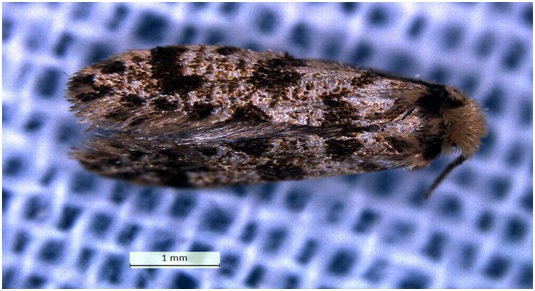
- 10 Oct 2023
Why in the News?
Researchers from the Zoology Department at St. Thomas College (Autonomous), Thrissur, have discovered a new species of bagworm moth, Wizard Bagworm, from near the Nariyampara Falls in the Idukki district.
What is a Bagworm Moth?
- Belonging to the family of moths in the order Lepidoptera, bagworm moths are recognized for their protective larval cases.
- These moths are distributed globally, with notable populations in North America and Africa.
- In their larval stage, these perennial moths inhabit various evergreen trees and junipers.
- They derive their name from the bag-like cases constructed by the larvae around themselves.
- The larvae can pose a threat to trees, particularly evergreens.
About Eumasia Venefica:
- This recently identified species earned its name due to the unique shape of its bag, resembling a wizard's hat.
- It is the fourth species within this genus to be documented in India.
- Distinctive Features:
- The species exhibits effective camouflage techniques to evade predators.
- Larval cases of Eumasia venefica are discovered attached to rocks adorned with lichens.
- These cases join together, forming a colony covered with lichens.
- The larval bags bear a resemblance to a 'witch's hat,' featuring a disc-like anterior and a tubular posterior part.
- Unlike polyphagous pests, the larvae of this species exclusively feed on algae and mosses present on rocks.
Pontus Tectonic Plate: Geologist Unexpectedly Finds Remnants of a Lost Mega-Plate (Science Daily)
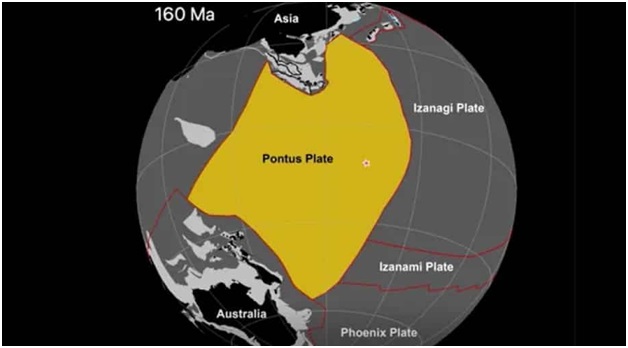
- 10 Oct 2023
Why in the News?
Geologists have reconstructed a massive and previously unknown tectonic plate that was once one-quarter the size of the Pacific Ocean.
About Pontus Tectonic Plate:
- Recently discovered in the west Pacific Ocean, the Pontus Tectonic Plate is a long-lost geological plate that holds significance in Earth's history.
- Believed to have measured about 15 million square miles at its zenith, roughly equivalent to one-quarter of the Pacific Ocean, this massive tectonic plate dates back as far as 160 million years, with more recent traces extending to approximately 20 million years ago.
- Over millions of years, the Pontus Plate underwent a gradual subduction process, pulled downward beneath a neighbouring plate by the force of gravity.
How was this Discovery Made?
- The subducting process involves the plate sinking into Earth's mantle due to its higher density compared to the surrounding mantle.
- Traces of a subducted plate are discernible in the form of rock fragments concealed in mountain belts.
- During subduction, upper portions of the plate are occasionally scraped off.
- Researchers employed geological data and computer modelling to reconstruct the movements of current plates, revealing a substantial area potentially vacated by the subducted Pontus Plate.
- Utilizing magnetic techniques, scientists identified basalt remnants in Borneo as Pontus relics, suggesting that this fragmentary evidence was left behind during the plate's subduction some 85 million years ago.
What is Plate Tectonics?
- Tectonic plates are large, rigid pieces of Earth's lithosphere, the outer shell comprising the crust and uppermost part of the mantle.
- These plates, which vary in size and shape, constantly move and interact, shaping the Earth's dynamic surface.
- The Earth's lithosphere is divided into several major plates, such as the Pacific, North American, and Eurasian plates, among others.
- The interactions at plate boundaries result in various geological phenomena, including earthquakes, volcanic eruptions, and the formation of mountain ranges.
- Plate tectonics, the theory explaining these movements, underscores how heat-driven convective currents in the Earth's mantle cause plates to diverge, converge, or slide past each other.
- Tectonic plate movements influence the planet's topography, seismic activity, and the distribution of continents and oceans, playing a fundamental role in Earth's geological evolution.
Reliance General gets ?923cr GST notices from the Directorate General of GST Intelligence (DGGI) (TOI)
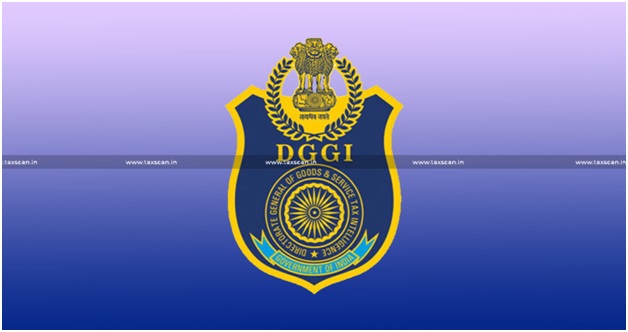
- 09 Oct 2023
Why in the News?
Reliance General Insurance Company (RGIC), a subsidiary of the Anil Ambani-led Reliance Capital, has received multiple show-cause notices worth Rs 922.58 crore from the Directorate General of GST Intelligence (DGGI).
About Directorate General of GST Intelligence (DGGI):
- Formerly known as the Directorate General of Central Excise Intelligence (DGCEI), the Directorate General of GST Intelligence (DGGI) stands as a premier intelligence organization operating under the Central Board of Indirect Taxes & Customs, within the Department of Revenue, Ministry of Finance.
- Its primary focus is on collecting, collating, and disseminating intelligence pertaining to Goods and Services Tax (GST) evasion and duties related to Central Excise and Service Tax on a pan-India basis.
- Evolution: Originally designated as the Directorate General of Anti-Evasion (DGAE), it was established in 1979 as an independent wing under the Directorate of Revenue Intelligence, New Delhi.
- Became a full-fledged Directorate in 1983, headed by a Director.
- In 1988, attained the status of Directorate General under a Director General.
- Currently comprises 04 offices of the Director General (East, West, North, and South), 26 Zonal Units, and 40 Regional Units.
Key Responsibilities:
- Intelligence Gathering: Collects information from various sources, including GST returns, financial statements, and other documents, to identify potential GST law violations.
- Investigation: Empowered to conduct investigations into suspected cases of GST evasion or non-compliance, involving summoning individuals, examining records, and executing searches and seizures.
- Enforcement: Enforces provisions of the GST law, taking legal action against offenders, imposing penalties, and recovering taxes or duties owed.
- Additional Functions: Collaborates with agencies like the Central Board of Indirect Taxes and Customs (CBIC) and State GST authorities for effective GST law implementation.
- Plays a crucial role in raising awareness about GST compliance and educating taxpayers on their legal obligations.
- Provides technical and legal assistance to field officers and other government entities involved in GST administration.
Mandarin-Trained Territorial Army Inducted At LAC (ET)
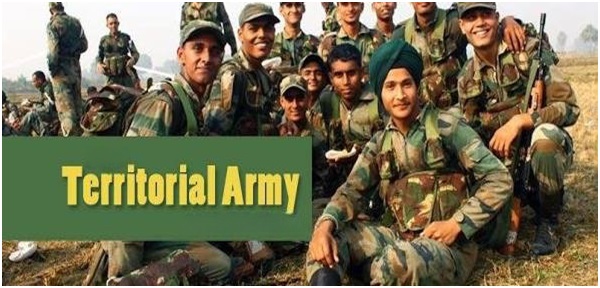
- 09 Oct 2023
Why in the News?
Recently the Territorial Army (TA) has inducted its first batch of Mandarin-trained officers to support the regular Army's efforts to enhance expertise in the Chinese language.
What is the Territorial Army (TA)?
- The Indian Territorial Army (TA) acts as the second line of defence, complementing the regular Indian Army.
- It is distinct in its role, being neither a profession, occupation, nor a source of employment.
- Reserved for individuals engaged in mainstay civilian professions, gainful employment or self-employment in a civil field is a prerequisite for joining the TA.
Key Roles:
- Relieving Regular Army: Primarily tasked with relieving the Regular Army from static duties.
- Assistance in Emergencies: Provides crucial assistance to civil authorities during natural calamities and tragedies.
- Essential Services: Aids civil administration in delivering essential services, particularly in areas facing stretched state machinery or security threats.
Service Commitment:
- Part-Time Service: TA volunteers typically serve in uniform for a few days annually, ensuring their readiness to bear arms for national defence during emergencies.
Historical Background:
- Established by the British in 1920 through the Indian Territorial Act, organized into 'The Auxiliary Force' for Europeans & Anglo-Indians and 'The Indian Territorial Force' for Indian Volunteers.
- The Territorial Army Act of 1948 formalized the TA, inaugurated by the first Indian Governor General, Shri C Rajagopalachari, on 9th October 1949.
- Motto: Savdhani Va Shoorta (Vigilance and Valour).
Eligibility Criteria:
- Nationality: Open to Indian citizens (Men & Women).
- Age: 18 to 42 years.
- Education: Graduate from any recognized university.
- Physical Standards: Must be physically and medically fit.
- Employment: Gainful employment in civilian professions.
- Exclusions: Serving members of the Regular Army/Navy/Air Force/Police/GREF/Para Military and similar forces are ineligible.
New Ensign for the Indian Air Force (HT)
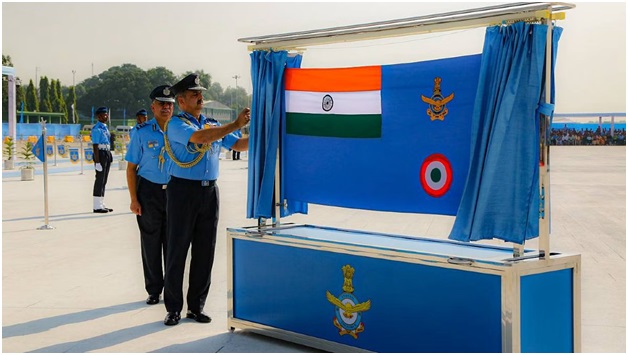
- 09 Oct 2023
Why in the News?
Indian Air Force (IAF) Chief Air Chief Marshal (ACM) Vivek Ram Chaudhari on Sunday unveiled a new Ensign for the force, as it marked its 91st anniversary, by the inclusion of the Air Force Crest in the top right corner of the Ensign, towards the fly side.
About the Indian Air Force (IAF) Ensign:
- The new IAF Ensign exclusively incorporates the IAF Crest, featuring distinctive elements that symbolize the spirit and ethos of the Indian Air Force.
Key Elements:
- IAF Crest: The crest prominently showcases the national symbol, the Ashoka Lion, atop, with "Satyamev Jayate" in the Devanagari script beneath.
- Himalayan Eagle: Positioned below the Ashoka Lion, a Himalayan eagle with outstretched wings symbolizes the formidable fighting spirit of the IAF.
- Light Blue Ring: Encircling the Himalayan eagle, a light blue ring bears the words "Indian Air Force."
- IAF Motto: Derived from the Bhagavad Gita, the motto "Nabha Sparsham Deeptam" (touching the sky with glory) is inscribed in golden Devanagari below the eagle.
- The IAF crest serves as a powerful symbol of inspiration and encouragement.
Variations:
- IAF has adopted various crests for commands, squadrons, and other establishments, all adhering to a standard frame featuring the formation sign and a motto at the foot.
Historical Evolution:
- British Era: During the British era, the IAF was known as the Royal Indian Air Force, and its ensign featured the Union Jack and the RIAF roundel.
- Post-Independence: The current IAF Ensign, created post-independence, replaces the Union Jack with the Indian tricolour and the RAF roundels with the IAF tri-colour roundel in the lower right canton.
Govt Mulling Incentives for ASHA Workers (ET)
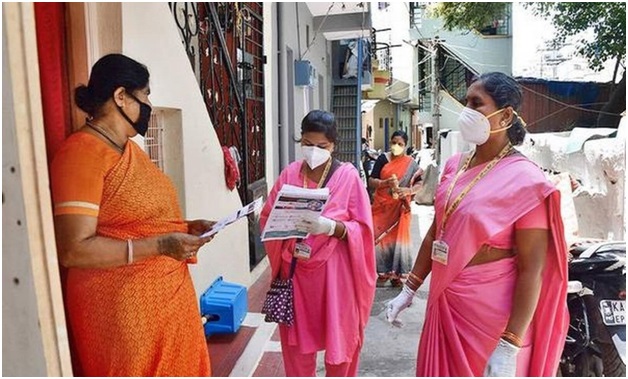
- 09 Oct 2023
Why in the News?
The government is planning to give incentives to ASHA health activists for mobilising eligible individuals for sickle cell disease screening and distribution of sickle cell cards for prevention and early detection of the disease.
About Accredited Social Health Activist (ASHA):
- ASHA serves as a trained female community health activist integral to the National Rural Health Mission initiated by the Government of India.
- Selected from the community and accountable to it, ASHA is trained to bridge the gap between the community and the public health system.
Key Functions:
- Acts as a care provider at the community level.
- Facilitates access to healthcare, medicine, and sanitation services.
- Health Awareness: Raises awareness of health issues among marginalized sections within the community.
- Advocate for Women's Health: Champions female health and hygiene standards.
- Advocates for a health-conscious approach to livelihood.
Implementation:
- The ASHA scheme is operational in all States/UTs, except Goa.
- States are mandated to employ at least one ASHA worker per every 1000 people.
- Inclusive Selection Process: The selection process involves various community groups, self-help groups, Anganwadi Institutions, and local committees.
Selection Criteria:
- Rural ASHA: Preferably a literate woman resident, married/widowed/divorced, aged 25 to 45 years, and preferably educated up to the 10th standard.
- Urban ASHA: Identified from vulnerable clusters, belonging to specific vulnerable groups, with good communication and leadership skills.
Compensation:
- Primarily an honorary volunteer compensated for specific situations.
- Ranges from Rs 2,000 to Rs 7,000, depending on the state.
- Incentives: Eligible for incentives under various national health programs.
Adani Ports' Flagship Mundra Port Completes 25 Years (ET)
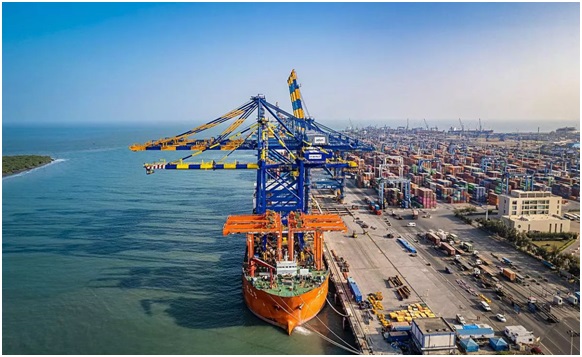
- 09 Oct 2023
Why in the News?
Mundra Port in Gujarat has completed 25 years of its operations, highlighting its expansion and evolution as one of the largest ports globally.
About Mundra Port:
- Mundra Port stands as India's largest private and container port, situated on the north shores of the Gulf of Kutch near Mundra in the Kutch district of Gujarat.
- As a deep-draft, all-weather port, it holds the distinction of being a Special Economic Zone (SEZ).
- Managed by Adani Ports and Special Economic Zone Limited (APSEZ), the port is a pivotal player in India's cargo movement, accounting for nearly one-fourth of the nation's total.
- Mundra Port plays a crucial role in managing 33% of the country's container traffic.
- Key Features: Strategic Location: Positioned on the Gulf of Kutch, Gujarat.
- Handling Capacity: With an impressive capacity of 260 MMT, the port efficiently manages over 155 MMT (FY 2022-23), contributing to almost 11% of India's maritime cargo.
- Infrastructure: Boasting 26 berths and two single-point moorings, the port accommodates diverse vessels and handles various cargo types, including containers, dry bulk, break bulk, liquid cargo, and automobiles.
- Coal Import Terminal: Home to the nation's largest coal import terminal, Mundra facilitates swift cargo evacuation with minimal turnaround time.
- Rail Connectivity: The port's rail network is seamlessly integrated into the national rail network, ensuring efficient cargo handling for destinations across India.
SUGAM REC Mobile App for 54EC Bonds Investors (PIB)

- 07 Oct 2023
Why in the News?
Recently, REC Limited, the Maharatna Central Public Sector Enterprise launched a SUGAM REC mobile application.
What is the SUGAM REC App?
- The SUGAM REC App caters exclusively to current and prospective investors in REC's 54EC Capital Gain Tax Exemption Bonds.
- Users can conveniently download e-bond certificates, apply for new investments, access essential forms for KYC updates, and connect with REC's Investor Cell through call, email, or WhatsApp.
What are 54EC Bonds?
- Also known as Capital Gain Bonds, these fixed-income instruments offer capital gains tax exemption under section 54EC.
- Investors can save on income tax for long-term capital gains by investing in these bonds within six months of the gain.
- With a fixed lock-in period of 5 years, the bonds can be held in either Physical or Demat form.
- Issued by government-managed institutions, they fund specific capital projects and derive their name from the relevant section of the Income Tax Act, 1961.
Key Facts about REC Limited:
- A 'Maharatna' company under the Ministry of Power, Government of India.
- Registered with RBI as a non-banking finance company (NBFC), Public Financial Institution (PFI), and Infrastructure Financing Company (IFC).
- Established in 1969 to address severe drought and famine, focusing on energizing agricultural pump sets for irrigation and reducing reliance on monsoons.
- Provides long-term loans and financing products to State, Centre, and Private Companies for infrastructure asset creation.
- It is the nodal agency for initiatives like Pradhan Mantri Sahaj Bijli Har Ghar Yojana (SAUBHAGAYA), Deen Dayal Upadhaya Gram Jyoti Yojana (DDUGJY), and National Electricity Fund (NEF) Scheme.
NGT Investigates Removal of Invasive Mussels in Ennore-Pulicat Wetland (The Hindu)
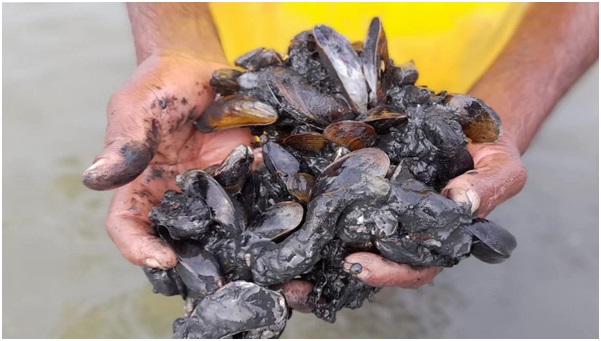
- 07 Oct 2023
Why in the News?
The Southern Bench of the National Green Tribunal (NGT) has asked the Fisheries Department and the Tamil Nadu State Wetland Authority to file a detailed report on the removal of invasive mussel species from the Ennore-Pulicat wetland.
What is Mytella strigata?
- Mytella strigata is a moderately large mussel known for its symmetrical shell, commonly found in the middle intertidal and subtidal waters of estuaries and coastal areas.
- These mussels attach to surfaces using byssus threads.
- Appearance: Individual mussels display diverse external colours such as black, dark bluish, brown, grey, orange, and occasionally green.
- The species exhibits various shell patterns, including zigzags, spots, or concentric bands.
- Habitat and Distribution: Found in dense clusters on hard substrates and in epibenthic habitats, Mytella strigata is prevalent along the Atlantic and Pacific coasts of tropical South and Central America.
- It has also expanded its presence to regions like Taiwan, the Philippines, Singapore, the Gulf of Thailand, the west coast of India, and the southeastern United States.
- Threats: These mussels pose a threat as they spread across river bottoms, forming carpets that hinder prawns from grazing or burying themselves in the sediment.
About Pulicat Lake:
- Pulicat is an extensive brackish-to-saline lagoon with marshes and a brackish swamp on the north.
- This is the second-largest saltwater lagoon in India and a Ramsar site (internationally recognized wetland under the Ramsar Convention).
- Only 16% of the lagoon is in Tamil Nadu; the rest is in Andhra Pradesh.
- It is fed by the Araani River at the southern tip and the Kalangi River from the northwest.
- Buckingham Canal, a navigation channel, passes through the lagoon.
- On the eastern boundary of this lagoon is Shriharikota Island, which separates the lagoon from the Bay of Bengal.
- The lagoon is shallow with large areas of mudflats and sandflats.
Watermeal May Become an Essential Food for Astronauts (India Today)
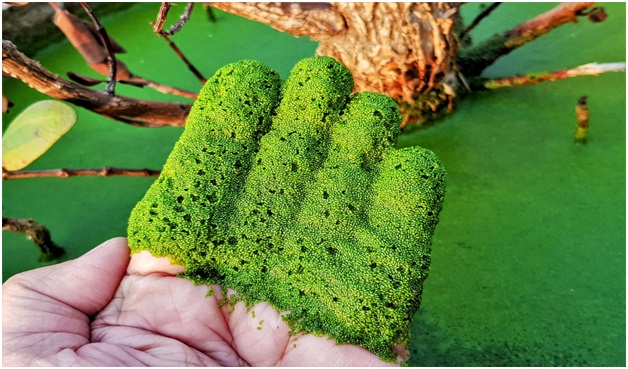
- 07 Oct 2023
Why in the News?
Scientists from Mahidol University in Thailand have been exploring the potential of watermeal, the smallest flowering plant on Earth, as a source of nutrition and oxygen for astronauts.
What is Watermeal?
- The Watermeal scientifically known as Wolffia, is often mistaken for algae, but they're actually the smallest flowering plants in the world!
- Its simplicity and rapid growth rate make it an ideal candidate for studying the effects of altered gravity on plant development.
- this tiny plant is aquatic, predominantly floating on the surface of water bodies.
- Because watermeal doesn’t have any roots, stems or leaves, it is basically just a sphere floating on a body of water.
- It's a prolific producer of oxygen through photosynthesis and belongs to the duckweed family (Lemnaceae).
- Each individual watermeal plant is extremely small, roughly the size of a pinhead.
- It has a simple, globular, and rootless structure, often appearing like minute green grains on the water.
- Watermeal thrives in quiet, nutrient-rich freshwater environments like ponds, lakes, and marshes.
- The plant is found globally, with a significant presence in Asia and Thailand.
- Watermeal is known to be a rich source of protein, making it a nutritious foodstuff.
- In Thailand, it has been part of the local diet for generations, appearing in dishes ranging from soups to salads.
Atmospheric Perturbations around the Eclipse Path (APEP) mission (HT)
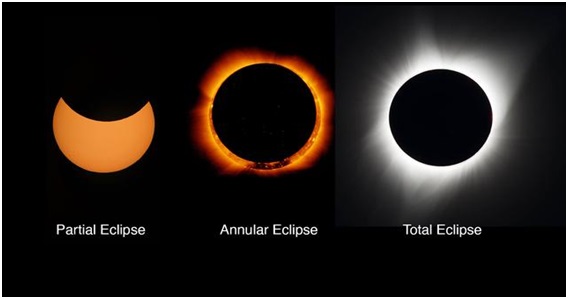
- 07 Oct 2023
Why in the News?
Dr Aroh Barjatya, an Indian-origin scientist is set to lead the multi-institution NASA rocket mission on October 14.
About Atmospheric Perturbations around the Eclipse Path (APEP) mission:
- The APEP mission entails the launch of three rockets, each equipped with scientific instruments, to explore changes in the upper atmosphere during a solar eclipse, particularly during the critical phase of sudden light reduction.
- Mission Objective: To investigate alterations in the ionosphere induced by the abrupt decrease in sunlight during an eclipse, leading to the generation of waves in this atmospheric layer.
- Measurements will encompass changes in electric and magnetic fields, as well as variations in density and temperature.
- Launch Details: The launch site is the White Sands Missile Range in New Mexico, with a specific focus on studying the ionosphere's response during an eclipse.
- Potential Impact on Communications: NASA notes projections indicating a temperature and density reduction in the ionosphere during the eclipse, potentially causing disruptive wave disturbances that could affect GPS and satellite communications.
- Process: Rockets will be strategically positioned just beyond the path of annularity, where the Moon directly aligns with the Sun.
- Each rocket will deploy four compact scientific instruments designed to capture data on electric and magnetic fields, density, and temperature changes.
- NASA's primary objective is to achieve unprecedented simultaneous measurements from multiple ionospheric locations during a solar eclipse.
- Rationale for Rocket Selection: Sounding rockets were chosen for their precision in pinpointing and measuring specific regions of space.
- Their ability to investigate lower altitudes, inaccessible to satellites, makes them ideal for this mission.
- Sounding rockets offer precise data recording as they ascend and descend during suborbital flights, covering altitudes ranging from 45 to 200 miles (70 to 325 kilometres) above Earth's surface along their flight path.
Gangetic River Dolphin (The Hindu)
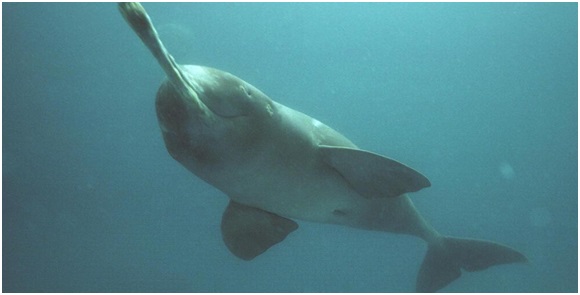
- 07 Oct 2023
Why in the News?
A recent publication by scientists and researchers has revealed that 19 Gangetic river dolphins had been rescued from the irrigation canals of the Ganga-Ghagra basin in Uttar Pradesh between 2013 and 2020.
About Gangetic River Dolphin:
- The Gangetic River dolphin is a freshwater species, representing one of the rare river dolphins worldwide.
- Distribution: It thrives in the river systems of Ganges-Brahmaputra-Meghna and Karnaphuli-Sangu, spanning across Nepal, India, and Bangladesh.
- Common Names: Known by various names such as Blind dolphin, Ganges dolphin, Ganges susu, hihu, side-swimming dolphin, and South Asian River Dolphin.
- Designated as India's National Aquatic Animal.
- Physical Features: Characterized by a long, thin snout, rounded belly, stocky body, and large flippers.
- Primarily feeds on fish, often found in counter-current systems of the main river channel.
- Eyes lack a lens, earning it the moniker 'blind dolphin.'
- Possesses an advanced bio-sonar system for effective hunting, even in murky waters.
- Requires surfacing every 30-120 seconds for breathing; its audible breathing sounds have led to the affectionate term 'Susu.'
- Conservation Status: IUCN categorizes it as Endangered.
- Protected under Schedule-I of the Wildlife (Protection) Act.
- Listed in CITES Appendix I.
Ayushman Arogya Mandir (The Hindu)
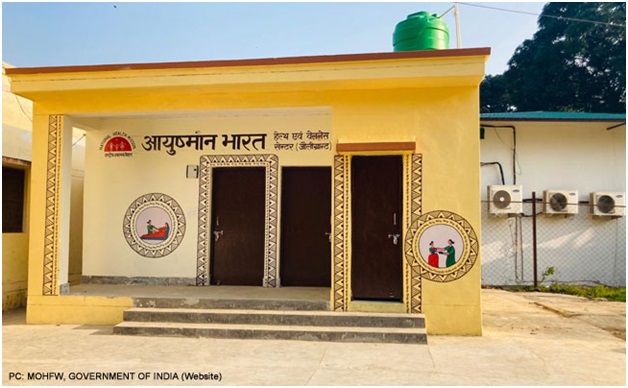
- 30 Nov 2023
Why is it in the News?
Recently, the Union Government has decided to rename the current Ayushman Bharat Health and Wellness Centres (AB-HWCs) as 'Ayushman Arogya Mandir.'
About Ayushman Arogya Mandir:
- The government has decided to rename the Ayushman Bharat-Health and Wellness Centres as 'Ayushman Arogya Mandir'
- The rebranded AB-HWCs will also have a new tagline -- 'Arogyam Parmam Dhanam'.
- Under the Government of India's flagship Ayushman Bharat Yojana, more than 1.6 lakhs AB- HWCs have been successfully established across states and UTs over the last five years with 219 crore footfalls so far.
- Ayushman Arogya Mandir is an attempt to move from a selective approach to health care to deliver a comprehensive range of services spanning preventive, promotive, curative, rehabilitative, and palliative care.
- It has two components which are complementary to each other.
- Under its first component, 1,50,000 Ayushman Arogya Mandir will be created to deliver Comprehensive Primary Health Care, that is universal and free to users, with a focus on wellness and the delivery of an expanded range of services closer to the community.
- The second component is the Pradhan Mantri Jan Arogya Yojana (PM-JAY) which provides health insurance cover of Rs. 5 lakhs per year to over 10 crore poor and vulnerable families seeking secondary and tertiary care.
- Ayushman Arogya Mandirs are envisaged to deliver an expanded range of services that go beyond Maternal and child health care services.
- It includes care for non-communicable diseases, palliative and rehabilitative care, Oral, Eye, and ENT care, mental health, and first-level care for emergencies and trauma , including free essential drugs and diagnostic services
- More than 2.71 crore wellness sessions have been held at these centers.
Fast Track Special Court (FTSC) (The Hindu)

- 30 Nov 2023
Why is it in the News?
The Union Cabinet recently gave its approval for the three-year extension of fast-track courts that are specifically used to handle sexual offense cases.
About Fast Track Special Court (FTSC):
- The Fast Track Special Court (FTSC) initiative started in August 2019 as a centrally sponsored scheme to handle cases related to rape and the POCSO Act.
- Originally planned for one year, it got extended to March 2023, and now it's extended further until March 2026 with a financial allocation of Rs. 1952.23 crore from the Nirbhaya Fund.
- These specialized courts, totaling 761, including 414 exclusive POCSO Courts, operate across all States and Union Territories.
- The Department of Justice, Ministry of Law & Justice, oversees their implementation.
- The primary aim is to expedite justice, offering quick relief to victims and reinforcing the nation's commitment to ending sexual and gender-based violence.
- The expected outcomes of this scheme are significant.
- They include a substantial reduction in pending cases related to Rape & POCSO Act, providing swift access to justice for victims through improved facilities and expedited trials, and reducing the burden on the judicial system by managing the number of cases effectively.
Angkor Wat Temple (TOI)
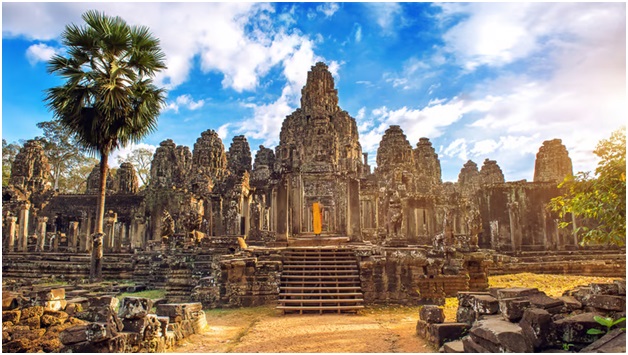
- 30 Nov 2023
Why is it in the News?
Angkor Wat, in the heart of Cambodia, has beaten Pompeii in Italy to become the eighth Wonder of the World.
About Angkor Wat Temple:
- Angkor Wat is among the most significant archaeological sites of Southeast Asia, located in the northern province of Siem Reap in Cambodia.
- The temple was constructed by the Khmer King Suryavarman II in the early 12th century.
- It was originally built as a Hindu temple, dedicated to Lord Vishnu by the Khmer Emperor Suryavarman II, it was converted into a Buddhist temple by his successor Jayavarman VII, who also built the famous Buddhist temple of Bayon nearby.
- The transition from Hinduism to Buddhism is evident in the intricate carvings that adorn the temple walls, depicting scenes from Hindu and Buddhist mythology.
- An interesting fact about Angkor is that it is also known as Yasodharapura.
- The name Angkor is derived from nokor, a Khmer word meaning "kingdom," which is derived from Sanskrit nagara, which means "city."
- Angkor Wat is said to represent Mount Meru, the home of the gods, according to both Hindu and Buddhist faiths.
- It is also famous for its statue of eight-armed Vishnu, also revered by the locals as their protecting deity.
- It holds the Guinness World Record for being the largest religious structure in the world, spread across some 400 km sq.
- In 1992 the temple complex was named a UNESCO World Heritage site.
Syrian Golan/Golan Heights (The Hindu)
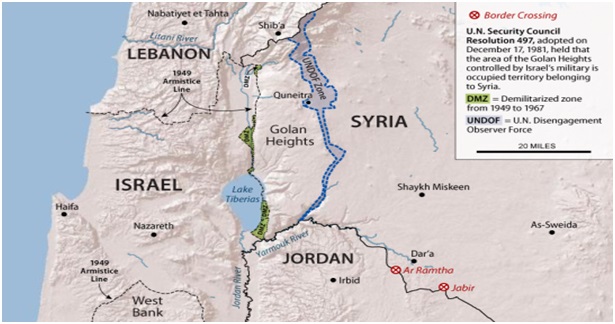
- 30 Nov 2023
Why is it in the News?
India has voted in favour of a draft resolution in the United Nations General Assembly (UNGA) that expressed deep concern over Israel not withdrawing from the Syrian Golan.
About the Syrian Golan/Golan Heights:
- Location: Situated in south-western Syria, the Golan Heights is a rocky plateau sharing borders with Israel, Lebanon, and Jordan.
- The elevated terrain overlooks the Jordan Rift Valley, housing the Sea of Galilee and the Jordan River, with Mount Hermon as a dominant feature.
- Demography: Over 40,000 people reside in the Israeli-occupied Golan, with a majority being Druze, an Arab minority practicing a distinct form of Islam.
- Although Israel offered Druze residents citizenship after annexation, most identified as Syrian and declined.
- Additionally, about 20,000 Israeli settlers live in the region.
- History of Conflict: Originally part of Syria, Israel captured the Golan Heights in 1967 during the Six-Day War and formally annexed it in 1981.
- Syria attempted to reclaim the area in the 1973 Middle East war but was unsuccessful.
- While an armistice was signed in 1974, international recognition of Israel's annexation is lacking, and Syria insists on the territory's return.
- Significance of Golan Heights: Israel argues that maintaining the Golan as a buffer zone is vital due to the Syrian civil war, protecting Israeli towns from neighboring instability.
- Concerns also include the fear of Iran, an ally of the Syrian president, establishing a permanent presence near the border for potential attacks on Israel.
- Both nations value the Golan's water resources and fertile soil.
The Booker Prize 2023 (Indian Express)

- 30 Nov 2023
Why is it in the News?
The 2023 Booker Prize has been awarded to Prophet Song, a dystopian vision of Ireland in the grips of totalitarianism.
Key Facts:
- Irish author Paul Lynch won the 2023 Booker Prize for his novel "Prophet Song," a dystopian work about an Ireland that descends into tyranny.
- Set in Dublin, it tells the story of a family grappling with a terrifying new world in which the democratic norms they are used to begin to disappear.
- He becomes the fifth Irish writer to win the high-profile literary prize, which has propelled to fame countless household names, including past winners Salman Rushdie, Margaret Atwood, and Hilary Mantel.
What is a Booker Prize?
- The Booker Prize is a literary prize awarded every year to the best novel written in the English language which is published in the UK or Ireland.
- It is a high-profile literary prize and thus, is much anticipated among book lovers.
- Background: It was established in 1969 by Booker McConnell Ltd, the prize transitioned to the Booker Prize Foundation in 2002, sponsored by the Man Group.
- Initially, the award was £21,000, increased to £50,000 in 2002.
- Selection Process: An advisory committee, comprising diverse literary figures, appoints a judging panel annually.
- BOOKER PRIZE winners: Indians
- VS Naipaul, In a Free State (1971)
- Salman Rushdie, Midnight’s Children (1981)
- Arundhati Roy, The God of Small Things (1997)
- Kiran Desai, The Inheritance of Loss (2006)
- Aravind Adiga, The White Tiger (2008)
Parthenon Sculptures (Indian Express)
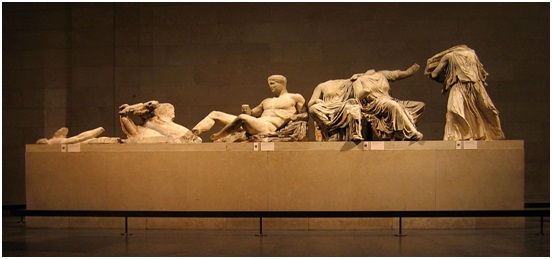
- 29 Nov 2023
Why is it in the News?
A diplomatic row sparked between Greece and the UK recently after British Prime Minister Rishi Sunak canceled a meeting with his Greek counterpart Kyriakos Mitsotakis over the status of the Parthenon Sculptures housed at the British Museum.
What are the Parthenon Sculptures?
- The Parthenon Sculptures at the British Museum are more than 30 ancient stone sculptures from Greece that are more than 2,000 years old.
- Most of them originally adorned the walls and grounds of the Parthenon temple on the rocky Acropolis hill in Athens.
- Completed in 432 BC, the temple is dedicated to the goddess Athena and is seen as the crowning glory of Athens’ Golden Age.
- While one notable sculpture, which is 75 meters long, depicts a procession for the birthday of Athena, others show gods, heroes, or mythical creatures.
How did the sculptures reach Britain?
- They were removed from the Parthenon in the early 19th century by Thomas Bruce, the 7th Earl of Elgin and then-British ambassador to the Ottoman Empire.
- The marbles were taken to Britain and purchased by the British Museum in 1816.
Swine Flu (TOI)
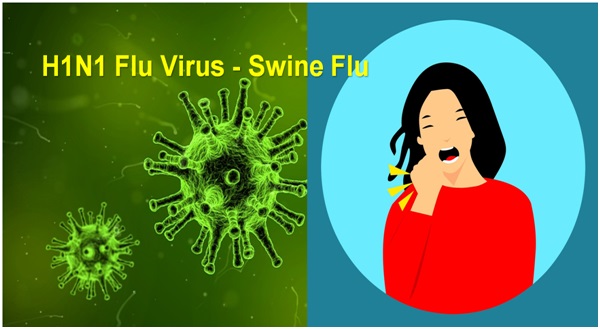
- 29 Nov 2023
Why is it in the News?
UK public health officials recently said they had confirmed a first human case of a swine flu strain similar to one that has been circulating in pigs.
About Swine Flu:
- Swine flu, scientifically known as H1N1 influenza, is a contagious respiratory illness caused by the H1N1 virus that commonly affects pigs.
- However, this virus can also infect humans, leading to a range of symptoms from mild to severe, and in some cases, it can be fatal.
- The virus spreads among humans through respiratory droplets produced when an infected person coughs or sneezes, making it highly transmissible.
- Swine flu symptoms resemble those of seasonal influenza, including fever, cough, sore throat, body aches, and fatigue.
- In severe cases, individuals may experience respiratory distress and pneumonia.
- One of the distinctive features of the H1N1 virus is its ability to affect younger age groups more severely compared to typical seasonal flu viruses.
- The World Health Organization declared a global pandemic of H1N1 influenza in 2009, emphasizing the need for international cooperation in monitoring and controlling the spread of the virus.
- Oseltamivir is an antiviral medication used to treat and prevent influenza A and influenza B.
Comet P12/Pons-Brooks (The Hindu)

- 29 Nov 2023
Why is it in the News?
Astronomers at the Indian Institute of Astrophysics (IIA) have used the Himalayan Chandra Telescope (HCT) in Hanle, Ladakh, to photograph the Comet P12/Pons-Brooks.
About Comet P12/Pons-Brooks:
- Comet 12P/Pons-Brooks is a Halley-type periodic comet that was first discovered by Jean-Louis Pons on July 12, 1812.
- It is nicknamed the 'Devil Comet' or likened to the 'Millennium Falcon' for its distinctive appearance.
- It has an orbital period of about 71.3 years.
- During its closest approach to the Sun or perihelion, the comet comes within about 0.78 astronomical units (AU) of the Sun, while at its furthest point, or aphelion, it is located at a distance of about 17.2 AU.
- Comet 12P/Pons-Brooks is also known for being the probable parent body causing the κ-Draconids meteor shower.
- It will make its return in 2024 and it is expected to reach its maximum brightness (potentially visible to the naked eye) during the month of April.
- With its closest approach occurring just a few days before a total solar eclipse on April 8, 2024, it presents a unique opportunity for skywatchers to potentially view the comet during the eclipse.
- However, since the comet's brightness can be unpredictable, there is no guarantee it will be visible.
- Comet 12P/Pons-Brooks is currently in the constellation of Lyra Constellation.
Indian Ocean Tuna Commission (IOTC) (PIB)
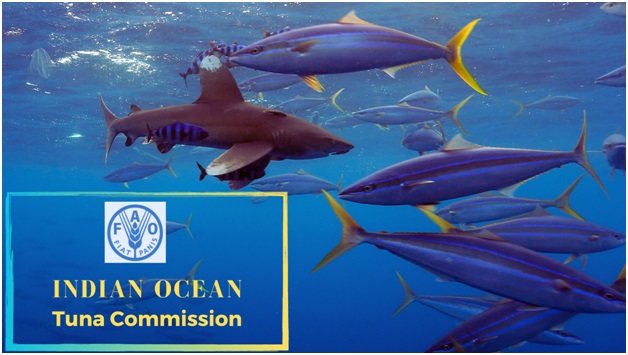
- 29 Nov 2023
Why is it in the News?
The Department of Fisheries, Ministry of Fisheries, Animal Husbandry & Dairying, GoI is organizing the 19th Working Party on Data Collection and Statistics (WPDCS19) of the Indian Ocean Tuna Commission (IOTC) from 28th November to 2nd December 2023.
About the Indian Ocean Tuna Commission:
- The Indian Ocean Tuna Commission (IOTC) is an intergovernmental organisation responsible for the management of tuna and tuna-like species in the Indian Ocean.
- It works to achieve this by promoting cooperation among its Contracting Parties (Members) and Cooperating Non-Contracting Parties in order to ensure the conservation and appropriate utilisation of fish stocks and encouraging the sustainable development of fisheries.
- The Food and Agriculture Organization of the United Nations adopted the Agreement for the Establishment of the Indian Ocean Tuna Commission during its 105th Session in Rome on 25 November 1993.
- The Indian Ocean holds the position as the second-largest tuna fishery globally, making it a crucial focus for the IOTC.
- Currently, the IOTC boasts 31 contracting parties, including countries and two cooperating non-contracting parties, Liberia and Senegal.
- Membership is open to Indian Ocean coastal countries, countries or regional economic integration organizations that are UN members, countries that are members of UN special organizations, and countries involved in tuna fishing in the Indian Ocean.
- India is an active member of the IOTC, with its headquarters located in Victoria, Seychelles.
INS Imphal (Business Standard)
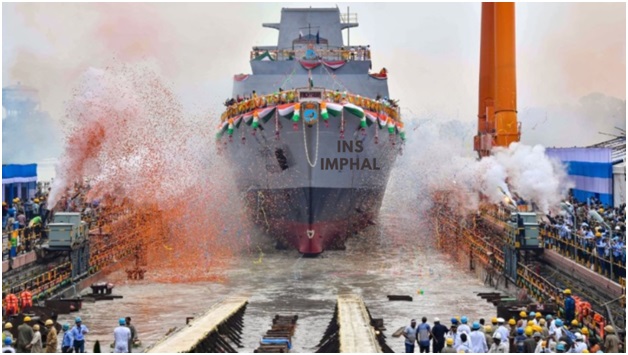
- 29 Nov 2023
Why is it in the News?
Defence Minister Rajnath Singh recently unveiled the crest of the Indian Navy's stealth-guided missile destroyer Imphal.
About INS Imphal:
- INS Imphal is the third ship in the Visakhapatnam-class stealth-guided missile destroyers.
- INS Imphal is the third of the four Project 15B stealth-guided missile destroyers.
- It's one of the biggest destroyers made in India, measuring 164 meters long and weighing over 7500 tonnes.
- Powered by Combined Gas and Gas (COGAG) propulsion, the ship is capable of achieving speeds in excess of 30 knots (56 km/hour).
- It's equipped to handle various tasks in maritime warfare.
- The ship boasts a high indigenous content of approximately 75 percent that includes BrahMos surface-to-surface missiles, medium-range surface-to-air missiles, anti-submarine indigenous rocket launchers, and 76mm super rapid gun mount.
- "Designed by the Indian Navy's Warship Design Bureau and built by Mazagon Dock Shipbuilders Limited, Imphal is a hallmark of indigenous shipbuilding and is amongst the most technologically advanced warships in the world.
- The crest design on the ship represents the Kangla Palace and 'Kangla-Sa.'
- The Kangla Palace is a historical and archaeological site in Manipur, serving as the traditional seat of the past kingdom.
- On the right side of the crest, 'Kangla-Sa' is depicted—a mythical being with a dragon's head and lion's body from Manipur's history, symbolizing the guardian of its people.
- ‘Kangla-Sa' is also the state emblem of Manipur.
- Interestingly, INS Imphal is the first capital warship named after a city in the northeast—Imphal, the capital of Manipur.
Himalayan Black Bear (The Hindu)
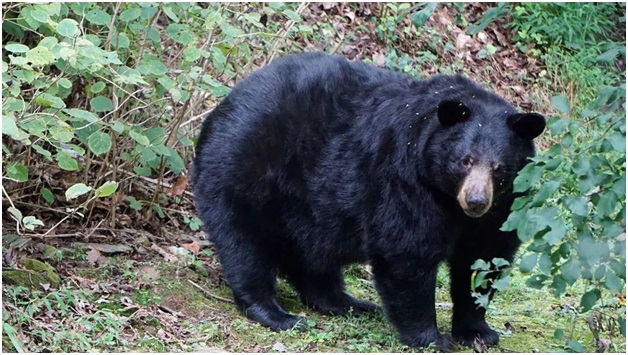
- 28 Nov 2023
Why is it in the News?
An animal keeper died after being attacked by a Himalayan black bear in the animal’s enclosure of Indira Gandhi Zoological Park (IGZP) here recently.
About Himalayan Black Bear:
- The Himalayan black bear (Scientific Name: Ursus thibetanus laniger) is a subspecies of the Asian black bear found in the Himalayas of India, Bhutan, Nepal, China, and Pakistan.
- In India, habitat covers the entire Himalayan range from Jammu & Kashmir to Arunachal Pradesh, extending to hilly areas in other northeastern states.
- Habitat: Thrives in heavily forested regions with broadleaved and coniferous forests.
- It utilizes orchards, agricultural fields, and human habitats to navigate between forest patches.
- Physical Features: Possesses soft and shiny fur, featuring a distinctive white V patch on the chest.
- Average length ranges from 1.4 to 1.7 meters, weighing between 90 to 200 kg (higher weight typically before hibernation).
- Life Span: In the wild, their life expectancy is approximately 25 to 30 years.
- Diet: Omnivorous nature, consuming acorns, nuts, fruit, honey, roots, and various insects like termites and beetle larvae.
- Behavior: Primarily diurnal by nature but often shifts to a nocturnal lifestyle to avoid human contact.
- Conservation Status: IUCN Red List classification: Vulnerable
- Due to encroachment of human population, forest fires and the timber industries; these have all reduced the bear's habitat.
- There is also a high mortality rate among the newborn.
ISRO's AstroSat (PTI)
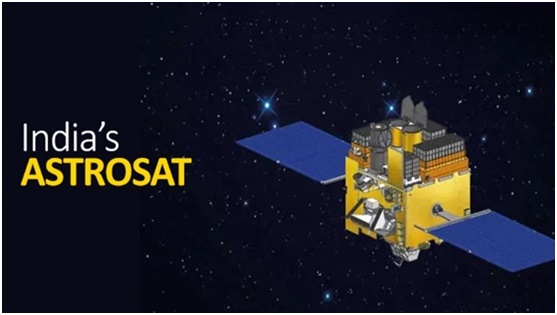
- 28 Nov 2023
Why is it in the News?
India's AstroSat space telescope has achieved a significant milestone by detecting more than 600 Gamma-Ray Burst (GRB), each marking the death of a massive star or merging of neutron stars.
About ISRO’s AstroSat:
- AstroSat is the first dedicated Indian astronomy mission aimed at studying celestial sources in X-ray, optical, and UV spectral bands simultaneously.
- One of the unique features of the AstroSat mission is that it enables the simultaneous multi-wavelength observations of various astronomical objects with a single satellite.
- AstroSat, with a lift-off mass of 1515 kg, was launched by the Indian launch vehicle PSLV from Satish Dhawan Space Centre, Sriharikota, on September 28, 2015, into a 650 km orbit inclined at an angle of 6 degrees to the equator.
- The minimum useful life of the AstroSat mission is expected to be 5 years.
- It carried a total of five scientific payloads, enabling imaging and studying the temporal and spectral properties of galactic and extra-galactic cosmic sources in a wide range of wavelengths on a common platform.
- The scientific objectives of AstroSat’s mission are:
- To understand high energy processes in binary star systems containing neutron stars and black holes.
- Estimate magnetic fields of neutron stars.
- Study star birth regions and high energy processes in star systems lying beyond our galaxy.
- Detect new briefly bright X-ray sources in the sky.
- Perform a limited deep-field survey of the Universe in the Ultraviolet region.
- At present, all the payloads are operational and are observing the cosmic sources.
Rythu Bandhu Scheme (The Hindu)
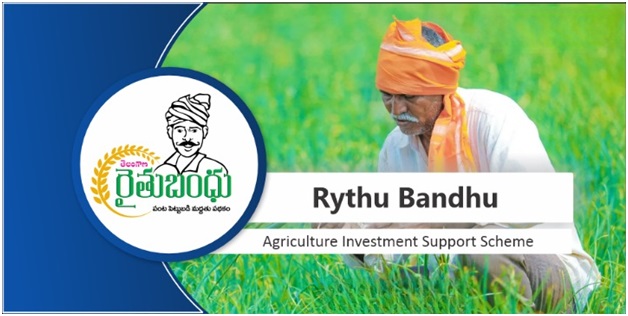
- 28 Nov 2023
Why is it in the News?
The Election Commission recently canceled the Telangana government's approval to give money to farmers through the Rythu Bandhu Scheme.
About Rythu Bandhu Scheme:
- Rythu Bandhu Scheme, also known as the Farmer's Investment Support Scheme (FISS), was initiated by the Telangana government in 2018.
- Objectives:
- Provide timely cash grants for the initial investment needs of farmers.
- Prevent farmers from falling into the debt trap.
- Financial Assistance: Rs 5,000 per acre per farmer per season directly transferred to their accounts.
- Distribution: Biannual support for both kharif and rabi harvests.
- Usage: Farmers can use funds for purchasing seeds, fertilizers, pesticides, labor, and other field operations of their choice.
- Eligibility: Open to all resident land-owning farmers, including those in forest areas with a Record of Forest Rights (ROFR).
- Special Inclusion: Farmers in forest areas, mainly from Scheduled Tribe communities, with a ROFR document, are eligible for benefits.
- It’s India's first direct farmer investment support scheme, providing cash directly to beneficiaries.
Kalakkad Mundanthurai Tiger Reserve (TOI)
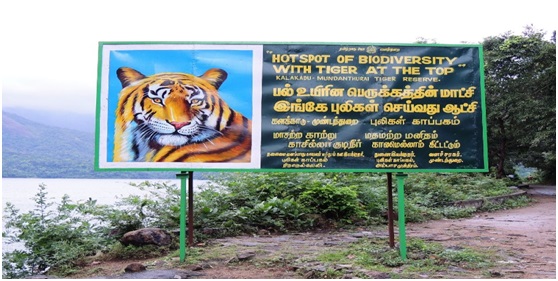
- 28 Nov 2023
Why is it in the News?
Recently a new plant species belonging to the 'Impatiens' genus (Balsaminaceae) has been identified in the Kalakkad Mundanthurai Tiger Reserve, Tirunelveli.
About Kalakkad Mundanthurai Tiger Reserve:
- The Kalakkad Mundanthurai Tiger Reserve, is situated in the Southern Western Ghats within the Tirunelveli and Kanyakumari districts of Tamil Nadu.
- This reserve combines three major sanctuaries:
- The Kalakkad Sanctuary
- The Mundanthurai Sanctuary, and
- A portion of the Kanyakumari Sanctuary.
- The Agasthyamalai Hills, nestled between Kerala and Tamil Nadu, forms the sanctuary's core and is part of one of the world's 18 biodiversity hotspots.
- This reserve is also recognized as the “River Sanctuary,” with 14 rivers originating from it.
- Flora: The flora in this region exhibits a gradual transition from dry thorn forest to dry deciduous, moist deciduous, and a patch of West Coast wet evergreen forests at higher elevations.
- Fauna: Diverse fauna includes species such as Lion-tailed Macaque, Nilgiri Tahr, Nilgiri Pipit, Grey Headed Bulbul, Blue Winged Parakeet, and more.
Details about the New Plant Species:
- The species, named 'Impatiens Karuppusamyi,' pays tribute to S. Karuppusamy for his significant contributions to the taxonomy of South Indian angiosperms.
- This particular plant is exclusively found in the Agasthyamalai region within the southern Western Ghats.
- Belonging to the scapigerous group (stemless group), the plant is observable only during the monsoon season, lasting for a few weeks.
- Impatiens, a genus comprising over 1,000 flowering plant species, is widely distributed across tropical Africa, Madagascar, India, Sri Lanka, and China.
Iran has threatened to close the Strait of Gibraltar linking the Mediterranean and the Atlantic for shipping (The Hindu)
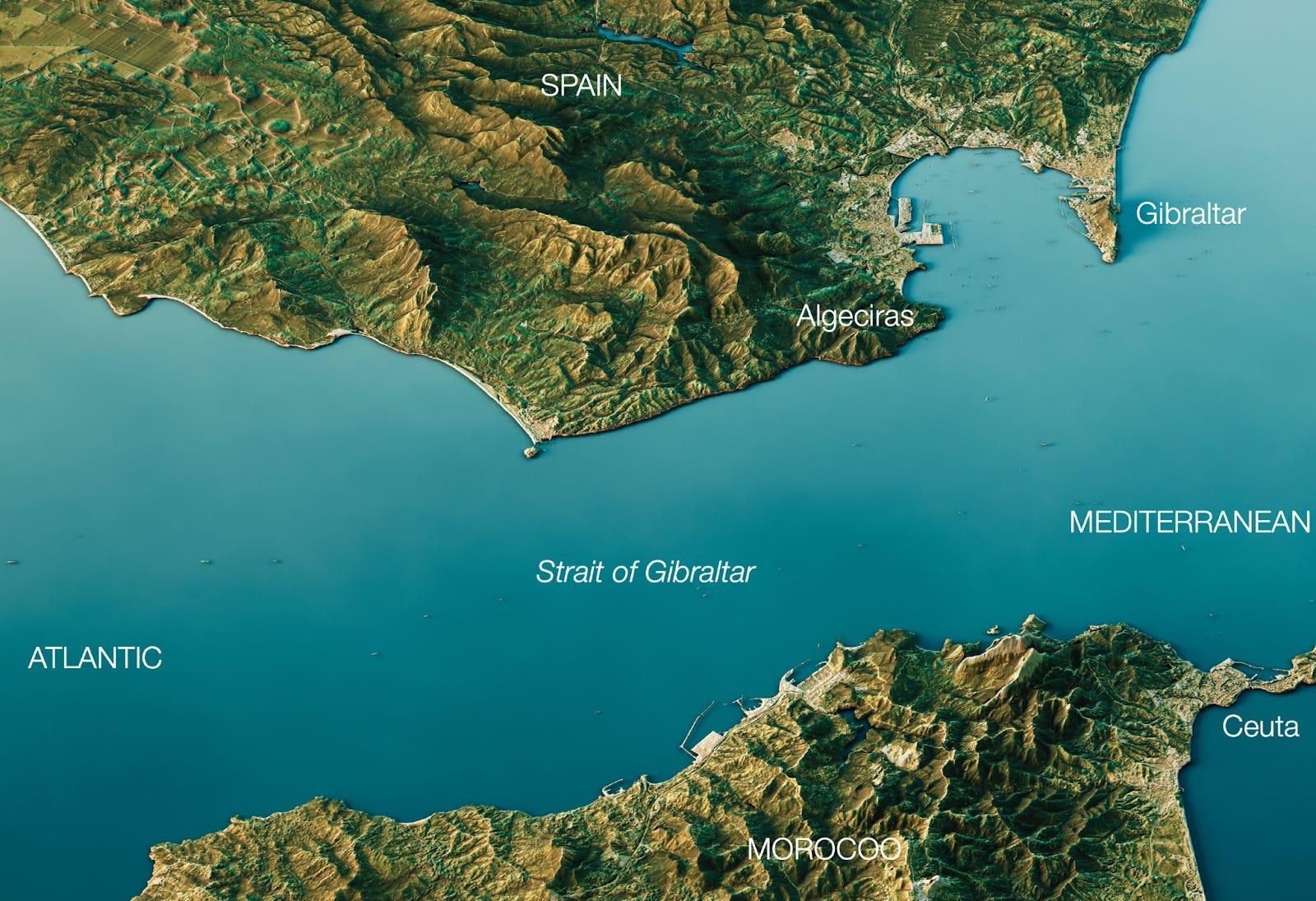
- 25 Dec 2023
Why is it in the News?
Recently, Iran has threatened to close the Strait of Gibraltar and the Mediterranean Sea unless Israel stops bombing Gaza.
About the Strait of Gibraltar:
- The Strait of Gibraltar is a narrow water passage that serves as a crucial link connecting Europe and Africa, facilitating the connection between the Mediterranean Sea and the Atlantic Ocean.
- Historical Significance: Prior to the inauguration of the Suez Canal in 1869, the Strait of Gibraltar held exclusive prominence as the sole gateway to the Mediterranean Sea.
- Geographical Borders: Positioned between Spain and the British Overseas Territory of Gibraltar in the north, and Morocco and the Spanish exclave of Ceuta in the south, the strait spans approximately 58 km and reaches a width of about 13 km at its narrowest point.
- Depth and Geological Formation: With depths ranging from 300 to 900 meters, the strait constitutes a significant divide between the elevated plateau of Spain and the Atlas Mountains of Northern Africa.
- Geological studies indicate that the strait originated from the northward movement of the African Plate towards the European Plate.
- High Maritime Activity: Recognized as one of the world's busiest waterways, the Strait of Gibraltar witnesses the daily transit of around 300 ships, equivalent to approximately one ship every 5 minutes.
- The Moroccan port of Tanger-Med, situated near Tangier, is a prominent port along the strait.
- Pillars of Heracles: Marking the eastern extremity of the strait, the area between the Rock of Gibraltar in the north and Mount Hacho or Jebel Moussa in the south spans approximately 23 km.
- These two land features referred to as the Pillars of Heracles, hold historical and geographical significance.
About the Mediterranean Sea:
- The Mediterranean Sea, an intercontinental body of water, is flanked by Europe to the north, Asia to the east, and Africa to the south.
- In the western expanse, it connects to the Atlantic Ocean through the narrow Strait of Gibraltar.
- To the extreme northeast, it links to the Black Sea via the Dardanelles Strait, the Sea of Marmara, and the Bosporus Strait.
- In the southeast, the Mediterranean Sea is connected to the Red Sea through the Suez Canal.
- Historical Significance: Recognized as the cradle of Western civilization, the Mediterranean Sea has played a pivotal role in the development of ancient cultures.
- Notable civilizations, including the Phoenicians, Ancient Greece, and the Roman Empire, flourished along its shores.
- Countries and Territories Along the Coast: A total of 22 countries, along with one territory (Gibraltar, a British Overseas Territory), have coastlines along the Mediterranean Sea.
- European nations with Mediterranean coastlines include Spain, France, Italy, Malta, Monaco, Slovenia, Croatia, Bosnia and Herzegovina, Montenegro, Albania, and Greece.
- Countries from the West Asian (Middle Eastern) region bordering the Mediterranean Sea include Turkey, Syria, Lebanon, Israel, Palestine (Gaza Strip), and the divided island of Cyprus.
- Additionally, five North African nations, namely Morocco, Algeria, Tunisia, Libya, and Egypt, have coastlines along the Mediterranean.
Mycoplasma Pneumonia (Indian Express)
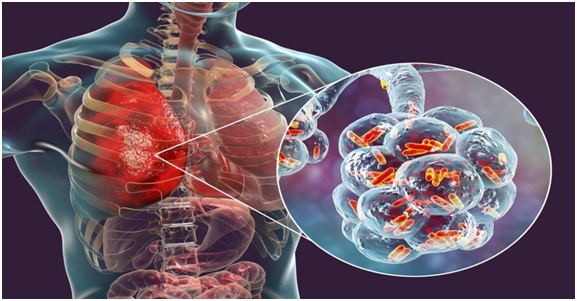
- 28 Nov 2023
Why is it in the News?
What is Mycoplasma Pneumonia?
- Mycoplasma pneumoniae is a type of bacteria that can cause illness by damaging the lining of the respiratory system (throat, lungs, windpipe).
- It acts more like a virus and spreads faster from person to person.
- It is a common cause of pneumonia in children, adolescents, and young adults.
- Vulnerable groups, who already have respiratory issues, are prone to developing this infection in a severe form.
- Most people with respiratory infections caused by Mycoplasma pneumoniae don’t develop pneumonia.
- For this reason, MP is known as an atypical pneumonia and is sometimes called walking pneumonia.
- Symptoms: Symptoms of Mycoplasma pneumoniae infection can include:
- Fever, Cough, Headache, Sore throat, Fatigue, Muscle aches, and Shortness of breath
- In most cases, Mycoplasma pneumoniae infection is mild and goes away on its own within a few weeks.
- However, some people may develop more serious complications, such as meningitis or encephalitis.
- It spreads through close contact with an infected person, such as through coughing or sneezing.
- It can also be spread through contact with contaminated surfaces.
- There is no vaccine to prevent Mycoplasma pneumoniae infection however there are multiple antibiotics that effectively cure this infection.
PM to release ‘Collected Works of Pandit Madan Mohan Malaviya’ on 25th December (PIB)
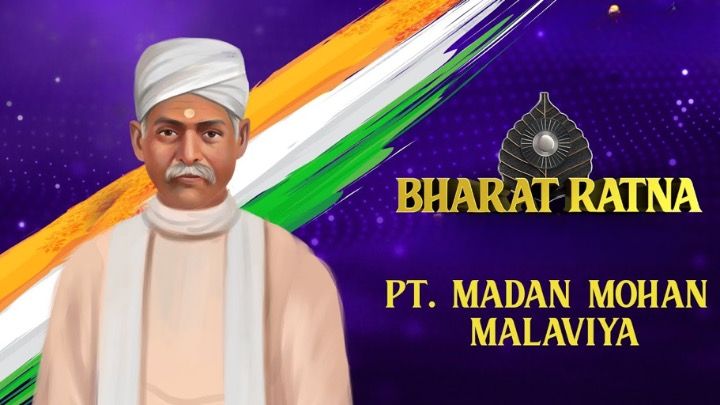
- 25 Dec 2023
Why is it in the News?
On the occasion of the 162nd birth anniversary of Mahamana Pandit Madan Mohan Malaviya, Prime Minister Shri Narendra Modi will release the first series of 11 volumes of ‘Collected Works of Pandit Madan Mohan Malaviya’, on 25th December, 2023.
About Pandit Madan Mohan Malaviya:
- Pandit Madan Mohan Malviya, born on December 25, 1861, in Allahabad, Uttar Pradesh, made significant contributions to India's education system and actively participated in the Indian Independence movement.
- Acknowledged as a venerable soul, Mahatma Gandhi bestowed upon him the title of 'Mahamana,' considering him an elder brother.
- In 2014, posthumously, Pandit Malviya was honoured with the Bharat Ratna, the highest civilian award in the country.
- In tribute to his legacy, the Indian Railways launched the Varanasi-New Delhi Mahamana Express in 2016.
Significant Contributions:
- Banaras Hindu University: In 1916, Pandit Madan Mohan Malviya played a pivotal role in the Indian independence struggle against British rule and established the Banaras Hindu University (BHU).
- Serving as the Vice-Chancellor at BHU from 1919 to 1938 showcased his dedication to education and leadership.
- Hindu Mahasabha: A founding member of the Hindu Mahasabha in 1906, Malaviya demonstrated his early leadership in this organization.
- As a social reformer and accomplished legislator, he contributed significantly during his 11-year tenure (1909–20) as a member of the Imperial Legislative Council.
- Scout and Guide Movement: Pandit Malviya was instrumental in establishing the Scout and Guide movement in India, showcasing his commitment to youth development and character building.
- 'Satyamev Jayate': Renowned for coining the famous slogan 'Satyamev Jayate,' Pandit Malviya proclaimed it during the 1918 Indian National Congress session when he served as the President.
- President of INC: Pandit Madan Mohan Malviya's leadership extended to the Indian National Congress, where he held the position of President for four sessions (1909, 1913, 1919, and 1932).
- His active role in the Civil Disobedience and Non-cooperation movements, led by Mahatma Gandhi, underscored his commitment to India's struggle for independence.
- Media Role: From 1924 to 1946, Pandit Malviya served as the Chairman of Hindustan Times and also founded several Hindi and English newspapers, including The Leader, Hindustan Dainik, and Maryada.
- Advocacy for Education and Social Causes: Malaviya championed free and compulsory primary education, opposed the system of indentured labour in the British Empire, and advocated for the nationalization of railways, reflecting his dedication to societal progress and reform.
“FLip” mutations of SARS-COV-2 may be evading immunity and leading to a surge in COVID cases, suggest researchers (DownToEarth)
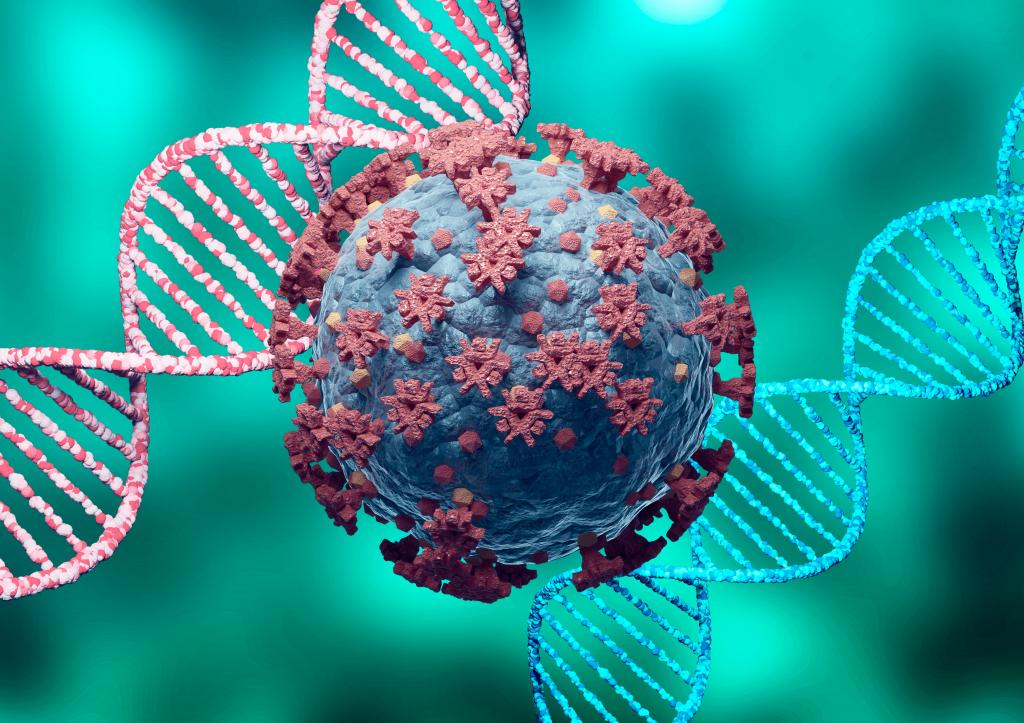
- 25 Dec 2023
Why is it in the News?
The omicron subvariant JN.1. is likely to soon become the dominant lineage of the SARS-CoV-2 virus worldwide, according to researchers at the University of Tokyo. The subvariant has a mutation in its spike protein, L455S, also called a “FLip” mutation.
Context:
- The mutations denoted as L455S and L455F are termed "FLip" mutations due to their role in interchanging the positions of amino acids F and L within the spike protein.
- These mutations enhance the virus's transmissibility.
- The substitution associated with these mutations reduces the receptor binding capacity of angiotensin-converting enzyme 2 (ACE2), a protein present in epithelial cells across various body parts, including the lungs, heart, and kidneys.
- ACE2 serves as a crucial entry point for the SARS-CoV-2 virus, binding through its spike-like protein on the virus's surface.
- The FLip mutations, specifically L455F and F456L, are characterized by the swapping of positions between two amino acids, F and L, within the spike protein.
What is Flip Mutation?
- A flip mutation, also known as bit flip mutation, is a genetic operator used in evolutionary algorithms, particularly genetic algorithms (GAs).
- It works by randomly flipping the values of individual genes (bits) within a chromosome, introducing small changes to the genetic makeup of an individual.
- Imagine a chromosome as a string of 0s and 1s, representing the genetic code for a specific trait or characteristic.
- A flip mutation randomly selects one or more of these bits and changes their values.
- For example, a 0 might be flipped to a 1, or vice versa.
- The following image depicts flip mutation:
How does it work:?
- Individual selection: An individual is selected from the population.
- Gene selection: One or more genes (bits) within the individual's chromosome are randomly chosen.
- Bit flipping: The value of each selected gene is flipped. This means that a 0 is changed to a 1, and vice versa.
World Climate Action Summit 2023 (NewsOnAir)
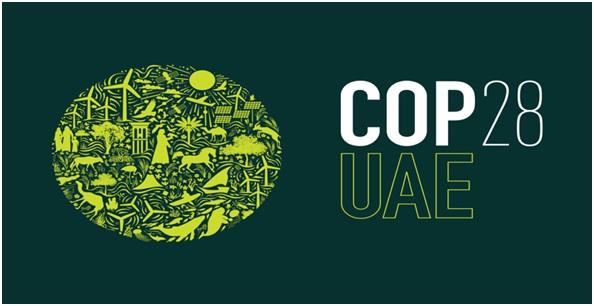
- 27 Nov 2023
Why is it in the News?
Prime Minister Modi will be on a two-day visit to Dubai, UAE from 30th November to attend the World Climate Action Summit.
About World Climate Action Summit:
- The World Climate Action Summit is the High-Level Segment of the 28th Conference of Parties (COP-28) to the United Nations Framework Convention on Climate Change (UNFCCC).
- COP-28 is being held from 28 November to 12 December 2023 under the Presidency of the UAE.
- The Conference of Parties to the UNFCCC provides a unique opportunity to impart momentum for collective action towards combating the shared challenge of climate change.
- The World Climate Action Summit will bring together heads of state and governments, leaders from civil society, business, youth, indigenous peoples' organisations, frontline communities, science, and other sectors.
- The summit aims to facilitate discussions on actions and plans to scale climate action.
- The COP 28 will focus on four paradigm shifts:
- Fast-tracking the energy transition and slashing emissions before 2030;
- Transforming climate finance, by delivering on old promises and setting the framework for a new deal on finance;
- Putting nature, people, lives, and livelihoods at the heart of climate action; and
- Mobilizing for the most inclusive COP ever.
- The summit may witness intense negotiations on unfulfilled promises of financial aid, particularly the yet-to-materialize $100 billion pledged by rich countries by 2020.
- Additionally, some countries, notably the European Union, are expected to advocate for a global deal to phase out unabated fossil fuels during COP28.
- During COP-26 in Glasgow, the Prime Minister announced five specific targets, titled "Panchamrit”, as India’s unprecedented contribution to climate action.
- The Prime Minister also announced Mission Lifestyle for Environment (LiFE) on that occasion.
- Climate change has been an important priority area of India’s G20 Presidency, and significant new steps have been captured in the New Delhi Leaders’ Declaration and other outcomes during our Presidency.
- COP-28 will provide an opportunity to take forward these successes.
Odisha Government has declared Leprosy as a 'Reportable Disease' in the State (New Indian Express)

- 25 Dec 2023
Why is it in the News?
The Odisha government on Friday declared leprosy a reportable disease in the state and asked hospitals and persons dealing with diagnosis and treatment, institutions imparting medical education and providing diagnostic services to report all cases to the respective district health authorities.
What is Leprosy?
- Leprosy, often referred to as Hansen's disease, is a persistent infectious illness brought on by the bacteria Mycobacterium leprae.
- The skin, eyes, mucosal surfaces of the upper respiratory tract, and peripheral nerves are the main areas affected by this condition.
- If left untreated, the condition has the potential to produce gradual and irreversible impairments.
- Prevalent in tropical and subtropical regions, leprosy qualifies as a neglected tropical disease (NTD) found in over 120 countries.
- Its occurrence spans all age groups, encompassing early childhood to advanced age.
- Transmission of Disease: Transmission of leprosy transpires through droplets from the nose and mouth, necessitating prolonged, close contact with an untreated individual.
- Contrary to misconceptions, casual interactions such as handshakes, hugs, shared meals, or proximity do not facilitate transmission.
- Symptoms: Symptoms usually manifest 3 to 5 years post-exposure to the leprosy-causing bacteria.
- Red patches on the skin.
- Skin Lesion
- Numbness in arms, hands, and legs.
- Ulcers on the soles of feet.
- Muscle Weakness and excessive weight loss.
- Nerve damage can result in loss of sensation in limbs and potential mucous membrane complications like a stuffy nose or nosebleeds.
- Treatment: Leprosy is curable through Multi-Drug Therapy (MDT), with early intervention crucial in preventing disability.
- Importantly, the commencement of treatment not only aids in recovery but also halts the transmission of the disease.
About the National Leprosy Eradication Programme (NLEP):
- The National Leprosy Eradication Programme is a centrally sponsored Health Scheme under the National Health Mission of the Ministry of Health and Family Welfare, Govt. of India.
- The Programme is headed by the Deputy Director of Health Services (Leprosy ) under the administrative control of the Directorate General Health Services, Govt. of India.
- While the NLEP strategies and plans are formulated centrally, the programme is implemented by the States/UTs.
- The major concern of the Programme is to detect cases of leprosy at an early stage and provide complete treatment, free of cost, in order to prevent the occurrence of Grade II Disability (G2D) in affected persons.
- India has achieved the elimination of leprosy as a public health problem as per WHO criteria of less than 1 case per 10,000 population at the National level in 2005.
- However, there are few districts within States where leprosy is still endemic.
Real Estate Investment Trusts (REITs) (Indian Express)

- 27 Nov 2023
Why is it in the News?
SEBI on Saturday decided to bring entities facilitating fractional investment in real estate under a regulatory framework, whereby they will be required to operate as Small and Medium Real Estate Investment Trusts.
About Real Estate Investment Trusts (REITs):
- A Real Estate Investment Trusts (REITs) is a company that owns and typically operates income-generating real estate or related assets.
- It pools funds from investors, directing them into various commercial real estate ventures, including office buildings, shopping malls, apartments, hotels, resorts, self-storage facilities, warehouses, and mortgages or loans.
- In contrast to conventional real estate firms, REITs don't develop properties for resale; rather, they acquire and develop properties primarily for inclusion in their investment portfolio.
- REITs offer individual investors an opportunity to share in the income generated by commercial real estate without the need to directly purchase such properties.
- Typically specializing in specific real estate sectors, REITs may focus on diversified or specialty portfolios, encompassing various property types like office and retail spaces.
- Most REITs are publicly traded on stock exchanges, similar to stocks, providing high liquidity compared to physical real estate investments.
- This stock-like nature allows investors to buy or sell REIT shares on the exchange at any time.
Sports Ministry requests IOA to constitute an ad-hoc committee to manage WFI affairs (Indian Express)
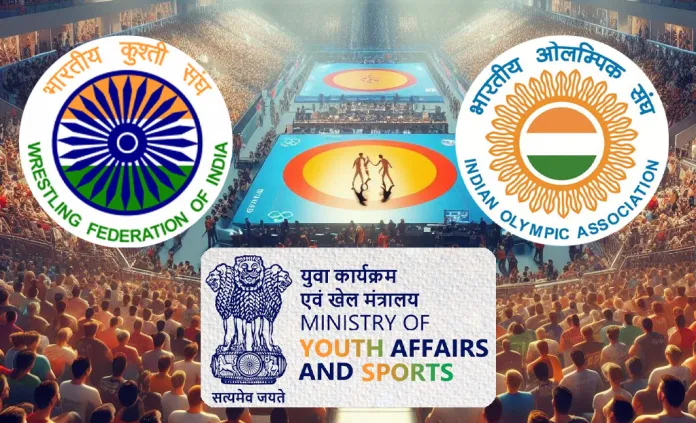
- 25 Dec 2023
Why is it in the News?
After suspending the newly elected Wrestling Federation of India (WFI) body on Sunday, the Sports Ministry have requested the Indian Olympic Association to constitute an ad-hoc committee to manage and control the affairs of the federation.
News Summary:
- Three days after the Wrestling Federation of India (WFI) elected a new governing council to run the sport in India, the Union Ministry of Youth Affairs and Sports directed the body to suspend all activities.
- It issued a letter to the Indian Olympic Association (IOA) to create an ad-hoc committee to manage and control the affairs of the WFI.
About the Wrestling Federation of India (WFI):
- Established in 1958 and headquartered in New Delhi, the Wrestling Federation of India (WFI) serves as the governing body for wrestling.
- Mission: WFI plays a pivotal role in nurturing and promoting wrestling talent for prestigious events such as the Olympics, Asian Games, National Wrestling Championships, and World Wrestling Championships.
- Affiliation: As an integral part of the Indian Olympic Association (IOA), WFI operates in accordance with the rules and regulations set forth by both the International Olympic Committee (IOC) and United World Wrestling (UWW).
- The UWW, recognized as the international governing body for wrestling, holds responsibilities ranging from overseeing wrestling competitions at the World Championships to ensuring adherence to standards at the Olympic level.
- WFI's Contract System for Wrestlers: In a groundbreaking move in 2018, WFI introduced an innovative contract system designed to support wrestlers.
- This system categorizes wrestlers into four grades:
- Grade A, providing financial assistance of 30 lakh rupees.
- Grade B offers a financial support package of 20 lakh rupees.
- Grade C, extending support amounting to 10 lakh rupees.
- Grade D provides a support package of 5 lakh rupees.
- To ensure relevance and fairness, the contracts undergo a thorough review on an annual basis, reflecting WFI's commitment to the ongoing development and support of wrestling talent.
About Indian Olympic Association (IOA):
- The Indian Olympic Association acts as the governing body overseeing the Olympic Movement and the Commonwealth Games within India.
- It holds affiliation with prominent international bodies, including the International Olympic Committee (IOC), Commonwealth Games Federation (CGF), Olympic Council of Asia (OCA), and Association of National Olympic Committees (ANOC).
- In fulfilling its role, the IOA manages key aspects of sports governance and prioritizes the welfare of athletes across the nation.
- Responsibilities: As a recognized entity by the Ministry of Youth Affairs and Sports, the IOA undertakes the crucial responsibility of coordinating the representation of athletes and teams in major international multi-sport events such as the Olympic Games, Commonwealth Games, Asian Games, and others sanctioned by the IOC, CGF, OCA, and ANOC.
- Historical Perspective: Established in 1927 with Sir Dorabji Tata serving as the Founding President and Dr. A.G. Noehren as the Secretary-General, the IOA operates as a Non-Profit Organization under the Societies Registration Act of 1860.
- This history underscores its enduring commitment to the promotion of sports.
- Governance Structure: Currently governed by a 32-member Executive Council, the IOA is led by a President.
- Elections for the Executive Council occur once every four years, emphasizing democratic and periodic leadership changes within the organization.
Supplementary Grants (The Hindu BusinessLine)
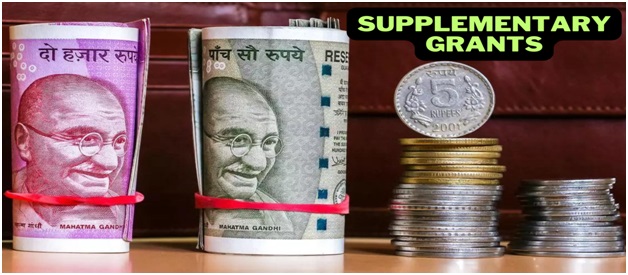
- 27 Nov 2023
Why is it in the News?
The Supplementary Demands for Grants (SDG) are likely to see additional allocation for fertliser, food and fuel subsidy along with Rural Employment Guarantee Scheme.
About Supplementary Grants:
- According to Article 115 of the Indian Constitution, there's a provision for additional funds known as supplementary, additional, or excess grants.
- When the funds approved by the Parliament are not enough for the planned expenses, an estimate is submitted to the Parliament for extra grants.
- These additional grants are reviewed and approved by the Parliament before the conclusion of the financial year.
- If the actual spending surpasses the approved grants, the Ministry of Finance and the Ministry of Railways make a request for an Excess Grant after the financial year ends.
- The Comptroller and Auditor General of India highlight these excesses to the Parliament.
- The Public Accounts Committee then examines these cases and provides recommendations to the Parliament.
- The Demand for Excess Grants is presented to the Parliament after the financial year, once the actual expenditures have been incurred.
High-energy Particle "Amaterasu" (Indian Express)
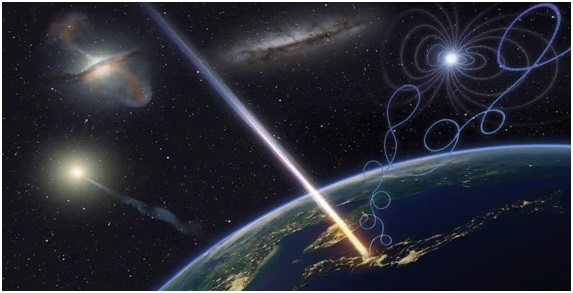
- 27 Nov 2023
Why is it in the News?
Scientists have detected one of the most powerful cosmic rays ever slamming into Earth but they have no idea what caused it or where it came from.
What is Amaterasu?
- The particle, named Amaterasu after the sun goddess in Japanese mythology, is one of the highest-energy cosmic rays ever detected.
- The Amaterasu particle has an energy exceeding 240 exa-electron volts (EeV).
- It is millions of times more than particles produced in the Large Hadron Collider, the most powerful accelerator ever built, and equivalent to the energy of a golf ball traveling at 95mph.
- It comes only second to the Oh-My-God particle, another ultra-high-energy cosmic ray that came in at 320 EeV, detected in 1991.
- Amaterasu appears to have emerged from the Local Void, an empty area of space bordering the Milky Way galaxy.
What are Cosmic Rays?
- Cosmic rays are high-energy particles, primarily protons and atomic nuclei, that originate from outer space and bombard Earth from all directions.
- They possess extraordinary energies, often exceeding those achievable in human-made accelerators.
- Created through various astrophysical processes, such as supernova explosions and the remnants of massive stars, cosmic rays travel through the vast expanse of space.
- Upon entering Earth's atmosphere, they collide with air molecules, initiating cascades of secondary particles.
- These rays play a crucial role in astrophysics, providing insights into the universe's most energetic phenomena.
- They contribute to our understanding of cosmic structures, magnetic fields, and the dynamics of celestial bodies.
- Despite their significance, the origins of certain ultra-high-energy cosmic rays remain mysterious, prompting ongoing research to unveil the secrets of these enigmatic particles.
Ministry of Textiles launches “Paat-Mitro” application to facilitate jute farmers (PIB)
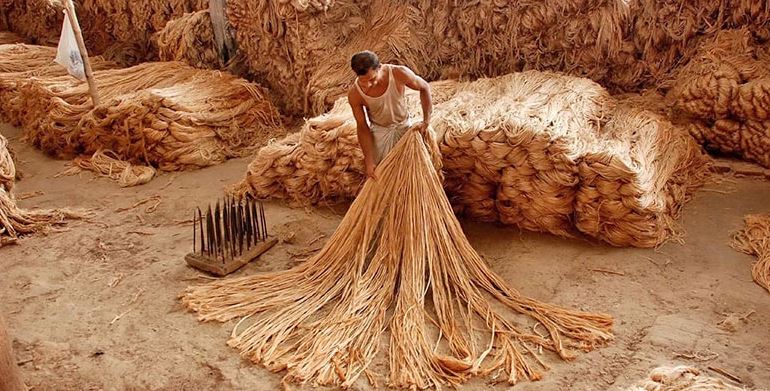
- 22 Dec 2023
Why is it in the News?
To provide important information about MSP and agronomy to jute farmers, the Ministry of Textiles launched “Paat-Mitro” - a mobile application, developed by The Jute Corporation of India Limited (JCI) during the ‘Jute Symposium’.
What is Paat Mitro?
- Paat Mitro is a mobile application crafted by the Jute Corporation of India Limited (JCI) with the primary aim of furnishing vital information on Minimum Support Prices (MSP) and agronomy to jute farmers.
Key Features:
- The application is accessible in six languages, ensuring inclusivity.
- All functionalities within the app are provided to users free of charge.
- Paat Mitro offers a comprehensive range of information, encompassing the latest agronomic practices, MSP details, Jute Gradation Parameters, farmer-centric schemes like ‘Jute-ICARE,’ weather forecasts, locations of JCI’s Purchase Centres, and Procurement Policies.
- Farmers can conveniently track the payment status for the raw jute they sell to JCI under the MSP Operation.
- The app integrates advanced technology features such as a Chatbot, facilitating farmers in resolving queries effectively.
Key Information about the Jute Corporation of India Limited (JCI):
- Established in 1971 under the aegis of the Government of India, the Jute Corporation of India Limited (JCI) serves as the official agency dedicated to ensuring minimum support prices (MSP) for jute cultivators.
- JCI functions as the executing body for several Government of India initiatives aimed at enhancing the jute crop and the welfare of jute growers.
- It operates under the administrative purview of the Ministry of Textiles.
- The geographical reach of JCI spans seven states renowned for jute cultivation in India, including West Bengal, Bihar, Assam, Meghalaya, Tripura, Orissa, and Andhra Pradesh.
- With an authorized and paid-up capital of Rs. 5 crore, JCI plays a pivotal role in implementing the government's policy decisions, obligatorily purchasing any quantity of jute offered by growers at support rates without quantitative limitations.
- Incurred losses during policy implementation by JCI are subject to reimbursement by the Government of India.
Rating agencies too subjective, loaded against India, need reform: CEA (Indian Express)
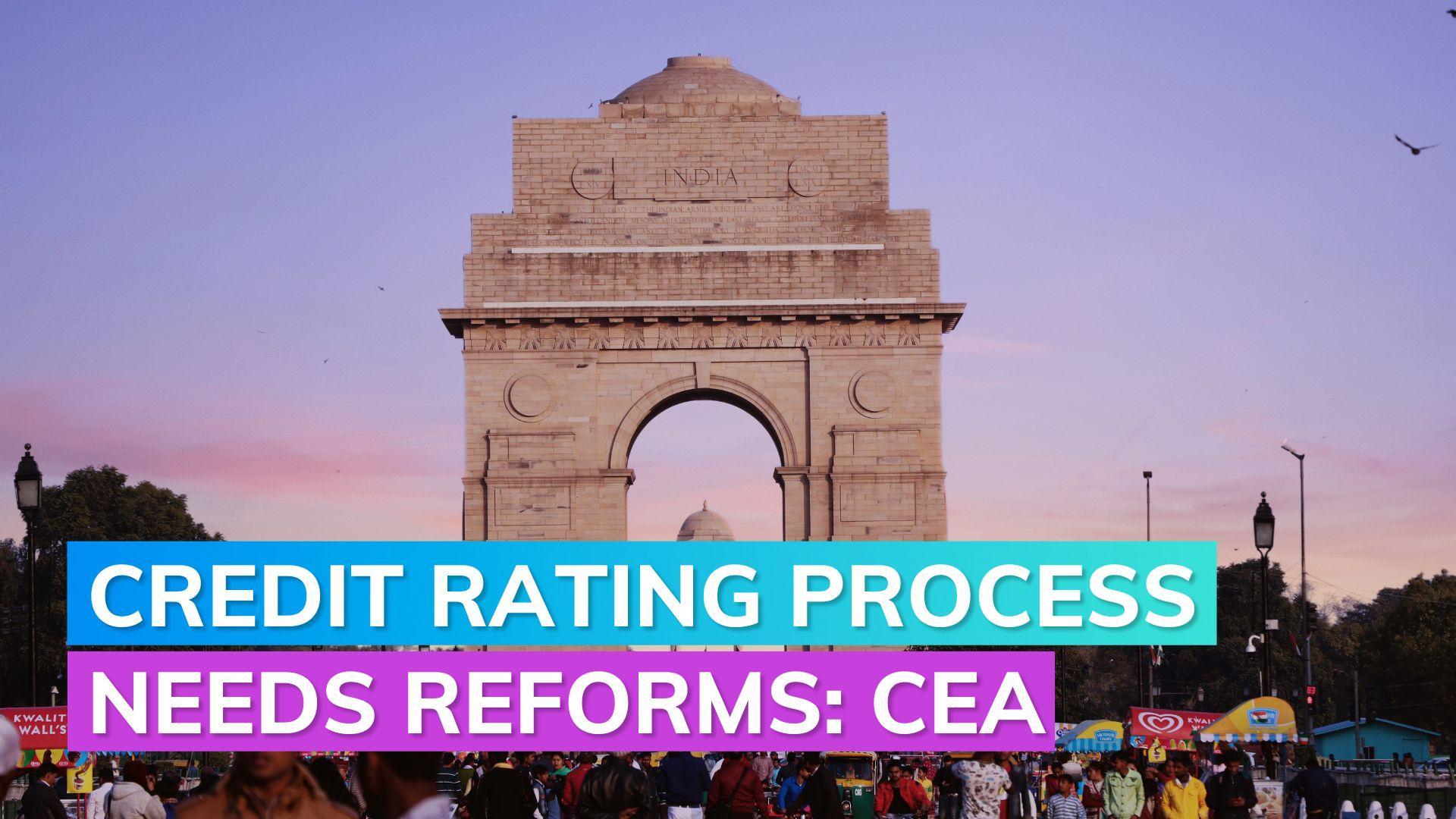
- 22 Dec 2023
Why is it in the News?
Credit rating agencies need to reform their sovereign rating process to correctly reflect the default risk of developing economies, saving billions in funding costs, the government’s chief economic adviser, V Anantha Nageswaran, said recently.
What is a Sovereign Credit Rating?
- A Sovereign Credit Rating serves as an assessment of a government's ability to meet its debt obligations, with a lower rating reflecting higher credit risk.
- Rating agencies typically consider multiple factors such as growth rate, inflation, government debt, short-term external debt as a percentage of GDP, and political stability.
- A positive credit rating not only boosts credibility but also indicates a history of timely loan repayments, aiding banks and investors in evaluating loan applications and determining appropriate interest rates.
- The global credit rating industry is dominated by three major agencies: Moody's, Standard & Poor's, and Fitch.
- Despite India's ascent from the 12th to the 5th largest economy globally in 2023, with the second-highest growth rate among comparable economies, its credit ratings from S&P and Fitch stand at BBB, while Moody's rates it at Baa3—indicating the lowest investment-grade level.
Concerns Regarding Credit Rating Methodology:
- A quantitative examination revealed that more than 50% of credit ratings rely on qualitative components.
- Institutional Quality, predominantly gauged through the World Bank’s Worldwide Governance Indicators (WGIs), emerges as the primary factor influencing the credit rating of a developing economy.
- This poses a challenge as these metrics are often non-transparent, perception-driven, and derived from a limited group of experts, making them inadequate in representing the sovereign's willingness to meet its financial obligations.
- The non-trivial impact of these indicators on ratings implies that developing economies must exhibit progress along subjective indicators to secure a credit rating upgrade.
CEA's Suggestions for Credit Rating Reform:
- The Chief Economic Advisor (CEA) proposed a shift towards primarily considering a country's historical debt repayment record as a key determinant of its 'willingness to pay,' in contrast to relying on potentially suboptimal qualitative information.
- Embracing such a model would significantly enhance the credibility of Credit Rating Agencies (CRAs).
- The use of qualitative information and judgment should only be a last resort when genuine, verifiable data options are unavailable.
- If governance indicators are to be employed, they should be grounded in clear, well-defined, and measurable principles, steering away from subjective assessments by CRAs.
- CRAs possess a comprehensive database of global best practices, influencing their judgments.
- Sharing this knowledge with the countries they assess would empower sovereigns to take targeted actions to enhance their creditworthiness.
Kambala (Indian Express)
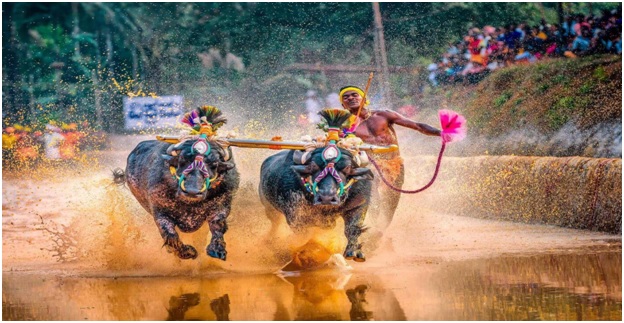
- 27 Nov 2023
Why is it in the News?
On the weekend of November 25 and 26, 160 pairs of buffaloes and their jockeys will race on specially made slush tracks for Kambala races at City Palace Grounds in Bengaluru.
What is Kambala?
- Kambala is a folk sport rooted in coastal Karnataka, particularly in areas where Tulu speakers are predominant.
- In the past, families and groups used to organize races in the muddy paddy fields after the harvest season.
- For many families, especially those from the Bunt community in coastal regions, Kambala holds significant prestige.
- Throughout the year, they groom pairs of buffaloes with the aim of winning major Kambala events and other races.
Kambala consists of four main categories:
- Negilu (plough): Lighter ploughs are used to tie buffaloes for the race.
- This category is for entry-level buffalo pairs participating in their first Kambala race.
- Hagga (rope): Buffaloes are raced by jockeys with just a rope tied to both buffaloes.
- Adda Halage: Participants stand over a horizontal plank dragged by buffaloes.
- Unlike Hagga and Negilu, where jockeys run behind the animals, buffaloes drag the jockeys in Adda Halage.
- Kane Halage: A wooden plank is tied to buffaloes.
- The plank, on which jockeys stand, has two holes through which water gushes out as it is dragged along the slush tracks.
- The height of water splashes determines the winner of the event.
Coming soon, a ‘Cafeteria’ for oil spill-hit birds at Ennore Creek (The Hindu)
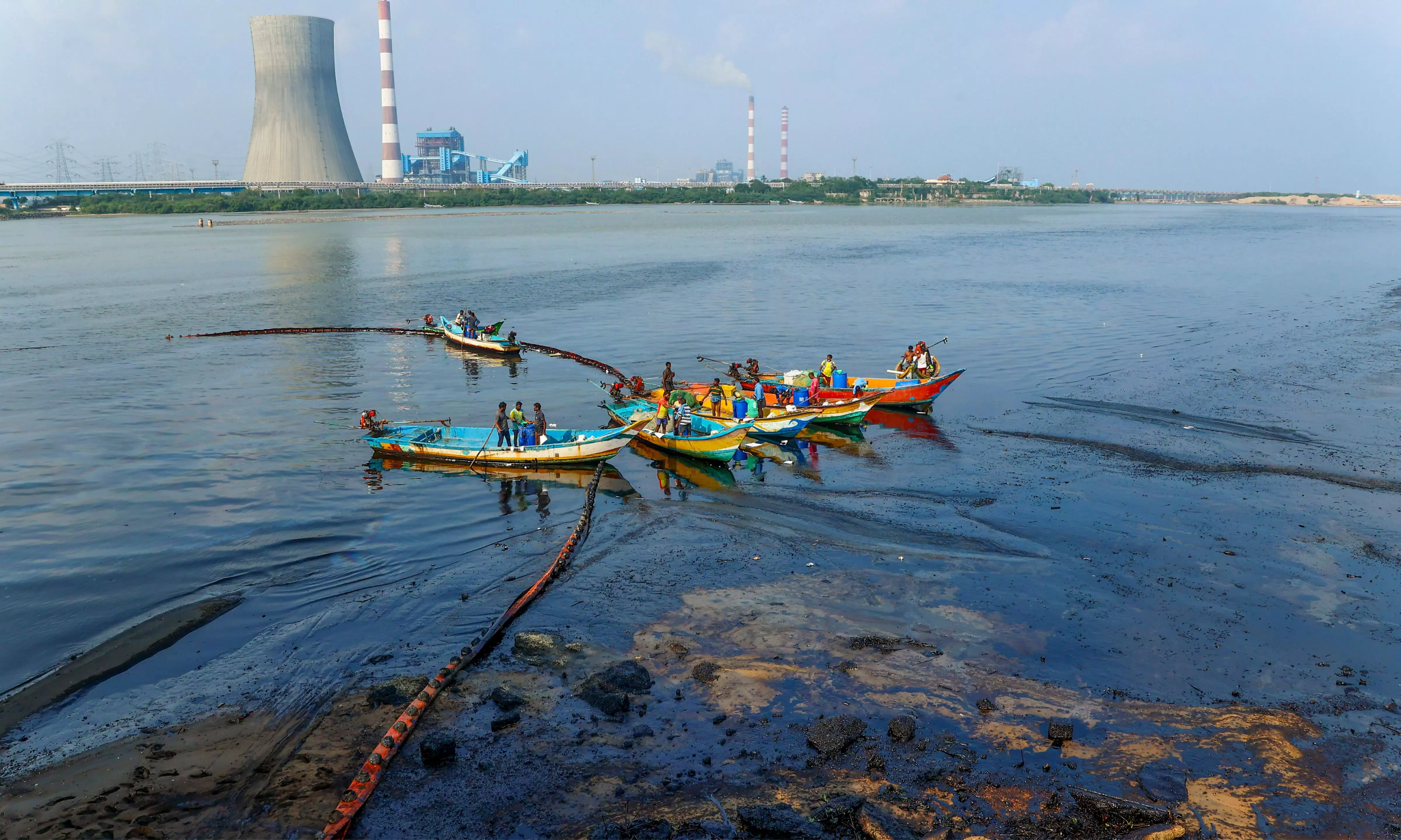
- 22 Dec 2023
Why is it in the News?
Experts from the Wildlife Trust of India (WTI) and the Besant Memorial Animal Dispensary (BMAD) are planning to establish feeding stations for birds at the creek, where contamination due to an oil spill from industries in Manali has brought down the bird population drastically.
About Ennore Creek:
- Ennore Creek, situated in Thiruvallur District, Tamil Nadu, is a backwater channel branching off from the Kosathalaiyar River.
- It merges with the Bay of Bengal at Mugathwara Kuppam, while its northern channel links to Pulicat Lake, the country's second-largest brackish water lake.
- For generations, this creek has been a lifeline for communities in the neighbouring villages, designated as CRZ IV (Water Body) in the coastal zone management plan by the Tamil Nadu State Coastal Zone Management Authority.
- Its significance is heightened for local fisherfolk, alongside the Buckingham Canal and the broader Pulicat water system.
- The Ennore Creek has historically fostered a robust aquatic ecosystem renowned for its biodiversity.
- This ecologically sensitive area once boasted extensive mangrove swamps, contributing not only to sustainable fish resources but also playing a crucial role in flood mitigation during periods of heavy rainfall, high tides, and cyclones.
About the Wildlife Trust of India:
- Wildlife Trust of India (WTI) is an Indian Non-profit Organisation (NGO) committed to nature conservation.
- Motto: In Service of Nature
- It was formed in November 1998, in response to the rapidly deteriorating condition of the country's wildlife.
- Its mission is to:
- Conserve wildlife and its habitat and
- Work for the welfare of individual wild animals, in partnership with communities and governments.
- WTI has earned recognition for accomplishing significant conservation milestones, including the recovery of populations for critically endangered species, successful species translocation, and the mitigation of human-animal conflicts.
How an AI tool can make weather forecasts more accurate and help tackle climate change (Indian Express)
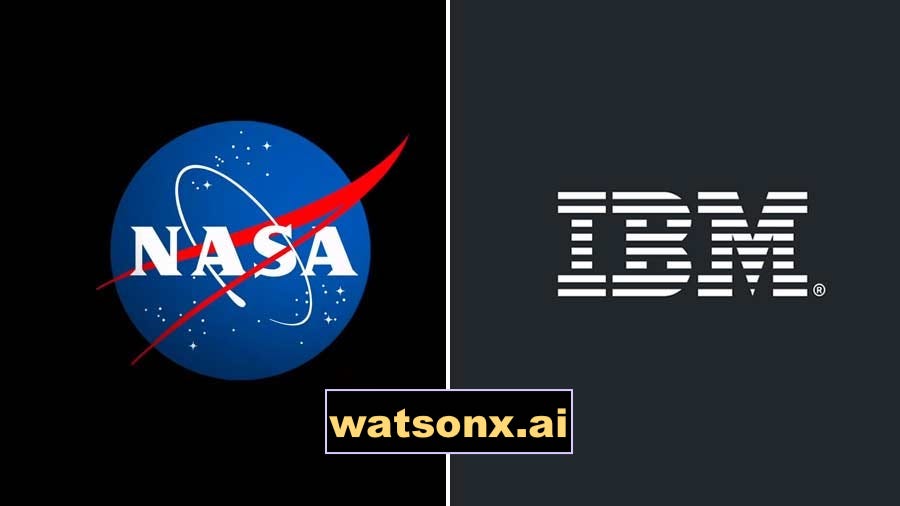
- 22 Dec 2023
Why is it in the News?
At the recent COP28, NASA and IBM announced that an Artificial Intelligence (AI) tool called watsonx.ai would be available on the open-source AI platform Hugging Space.
What is watsonx.ai?
- Watsonx.ai is a collaborative Artificial Intelligence tool developed by IBM and NASA.
- Its primary function is to enable users to monitor Earth from space, assessing past environmental changes and offering predictions about future occurrences.
- User-Friendly Interface: The tool is designed for simplicity, requiring users to select a location and a date.
- Watsonx.ai then highlights changes in floodwater, reforestation efforts, and other pertinent factors.
Functionality:
- Watsonx.ai is built on a foundation model trained on a diverse set of uncategorized data, allowing it to extrapolate information from one context to another.
- NASA provides datasets in the form of satellite images, and IBM developed the foundation model to interpret these visual inputs.
- The model's training involves comprehending visual sequences over time by reconstructing images with blank areas. This process enhances its ability to understand the connections between photos.
- Adjustments were made to the model for specific tasks such as segmenting and categorizing photos.
Additional Components:
- Watsonx.data: A specialized data store optimized for governed data and AI workloads.
- It facilitates the scaling of AI workloads by leveraging the entire data landscape.
- Watsonx.governance: An end-to-end toolkit encompassing both data and AI governance. It aids clients in establishing responsible, transparent, and explainable AI workflows.
- The toolkit provides governance capabilities for model management throughout the AI lifecycle.
Why rain and flood woes have hit Tamil Nadu hard in December (Indian Express)
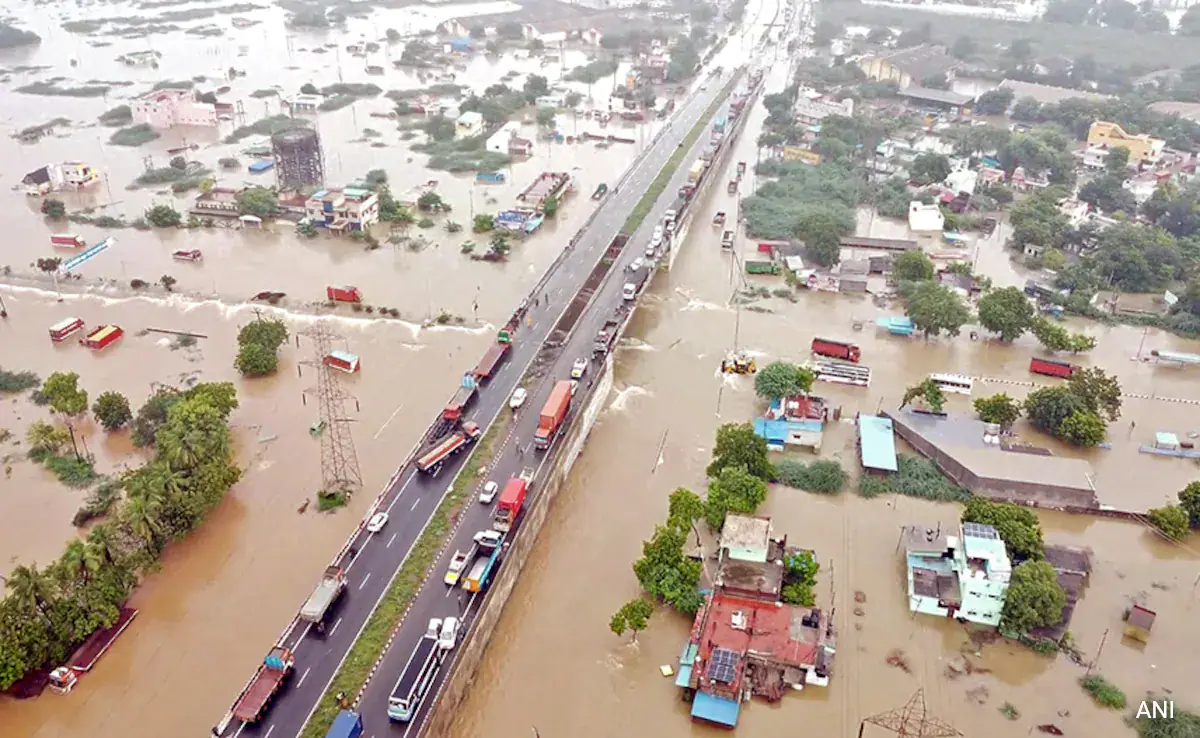
- 22 Dec 2023
Why is it in the News?
Tamil Nadu has battled heavy rainfall throughout December. At the beginning of the month, parts of Chennai and its neighbourhood experienced massive flooding because of Cyclone Michaung.
News Summary:
- Tamil Nadu has experienced significant rainfall, recording 450mm since October 1.
- Among the 38 districts, only 14 have reported deficient rainfall until December 20.
Seasonal Rainfall Norms:
- December rainfall is typical for Tamil Nadu, with the northeast monsoon being crucial for the region.
- Nearly 48% of the annual rainfall (443.3mm) in Tamil Nadu occurs from October to December, impacting rabi cultivation.
Recent Rainfall Patterns in Southern Tamil Nadu:
- Three districts in southern Tamil Nadu witnessed 'exceptionally' heavy rainfall from December 17 to 19.
- The India Meteorological Department (IMD) reported a 100% or more surplus during this period compared to the previous week (December 6-13, 2023).
Factors Contributing to Record Rainfall:
- Vigorous northeast monsoon over Tamil Nadu and Kerala, particularly in the southern regions.
- Development of a cyclonic circulation in the southwest Bay of Bengal on December 16, enhancing northeast monsoon winds.
- The persistence of this system over southern Tamil Nadu on December 18 and 19, led to heavy cloud convection and hefty rainfall.
IMD's Forecast:
- The cyclonic circulation has moved away from the Indian landmass, currently positioned over the southeast Arabian Sea.
- No significant rainfall is expected in Tamil Nadu, but the IMD predicts light to moderate intensity rainfall (up to 64mm in 24 hours) in certain areas of southern Tamil Nadu.
What is Northeast Monsoon?
- The northeast monsoon stands as a significant and permanent element within the Indian subcontinent's climate system.
- Its nomenclature originates from the prevailing direction of the monsoon winds—blowing from the northeast to the southwest.
- In their trajectory, these winds accumulate moisture from the Bay of Bengal, subsequently depositing it over southern states such as Tamil Nadu, Andhra Pradesh, Kerala, south Telangana, and Karnataka.
- This monsoon is alternatively known as the winter monsoon, retreating monsoon, or reverse monsoon.
- Period: The northeast monsoon maintains activity throughout the three-month span from October to December.
- Causes and Influences: One of the primary instigators of the northeast monsoon is the southward shift of the Inter Tropical Convergence Zone (ITCZ).
- The ITCZ, a dynamic belt near the Equator, marks the convergence of trade winds from the northern and southern hemispheres.
- The southward displacement of the ITCZ, coupled with the warming of the Indian Ocean, induces a reversal in the lower-atmosphere moisture-laden winds' direction—from southwest to northeast—thereby triggering the Northeast Monsoon (NEM).
Sangai Deer (Indian Express)
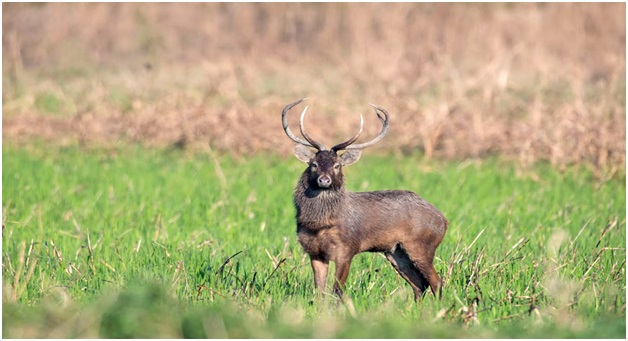
- 25 Nov 2023
Why is it in the News?
The Manipur Government has expressed its reservations to the Centre over a hydro-electric modernisation plan in the state’s famous Loktak Lake saying it could be detrimental to the endangered species of Sangai deer apart from disturbing the biodiversity of the lake.
About Sangai Deer:
- The sangai is an endemic and endangered subspecies of Eld's deer found only in Manipur, India.
- It is also the state animal of Manipur.
- Its common English name is Manipur brow-antlered deer or Eld's deer and the scientific name is Rucervus eldii eldii.
- It is believed to have originated from a common ancestor of the brow-antlered deer family, which is thought to have existed in the region during the Pleistocene epoch, around 12,000 years ago.
- Its original natural habitat is the floating marshy grasslands of the Keibul Lamjao National Park, located in the southern parts of the Loktak Lake, which is the largest freshwater lake in eastern India.
- Appearance: is a medium-sized deer that is unique in appearance and behavior.
- The Sangai deer is a slender and graceful deer, with long legs and a thin neck. They have a height of around 90-100 cm at the shoulder and can weigh between 70 to 120 kg.
- Food Habits: The Sangai deer is primarily found in the marshy wetlands of the Loktak Lake in Manipur, where they feed on the vegetation growing on the floating biomass called “Phumdis.”
- They are known to feed on a wide variety of plants, including grasses, sedges, and herbs.
- Vulnerable Species: The Sangai is an endangered species and is listed in Schedule I of the Indian Wildlife Protection Act of 1972.
- The population of Sangai deer has been severely threatened due to habitat loss, hunting, and poaching.
- In the 1950s, the population of the Sangai deer was estimated to be around 600-700 individuals.
- However, by the 1970s, the population had declined to less than 100 individuals due to extensive hunting and habitat loss.
- The Government of India and the State Government of Manipur took several conservation measures, including the establishment of the Keibul Lamjao National Park in 1977, to protect and conserve the Sangai deer.
- The Sangai deer is a social animal and is usually found in small herds of 2-20 individuals.
- Protecting and conserving their natural habitats is one of the most effective ways to ensure the survival of these species.
- This can be achieved through the creation and management of protected areas, such as national parks and wildlife reserves, and the restoration of degraded habitats.
Digital Twins (TOI)
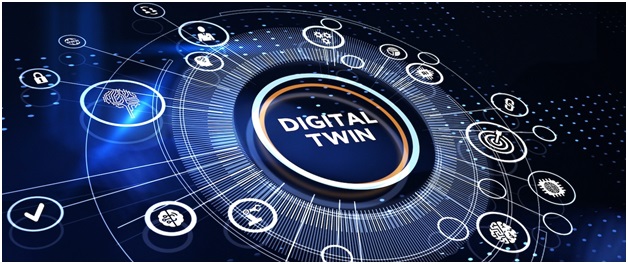
- 25 Nov 2023
Why is it in the News?
Recently, the Survey of India (SoI) and Genesys International, a prominent Indian mapping company, revealed a strategic collaboration for the implementation of a three-dimensional (3D) digital twin-mapping initiative in India.
About Digital Twin:
- Digital twins are digital representations of physical objects, people or processes.
- They aid decision-making through high-fidelity simulations of the twinned physical system in real-time and are often equipped with autonomous control capabilities.
- These replicas serve as dynamic and detailed counterparts, providing a real-time, data-driven simulation of their physical counterparts.
- The concept of digital twins has gained prominence with the advent of technologies like the Internet of Things (IoT), data analytics, and machine learning.
- In essence, a digital twin continuously collects and processes data from its physical counterpart, offering a comprehensive view of its behavior, status, and interactions.
- This real-time synchronization enables organizations to monitor, analyze, and understand the performance of physical assets or processes more effectively.
Applications:
- Manufacturing Sector: One primary application of digital twins is in the manufacturing sector.
- Manufacturers use digital twins to create virtual models of products and production processes.
- This allows for simulation, analysis, and optimization before physical prototypes are built, leading to reduced development costs and improved product quality.
- Healthcare: In healthcare, digital twins are employed to create personalized models of patients.
- These models, based on individual health data, help in predicting health outcomes, optimizing treatment plans, and advancing medical research.
- Transportation: Transportation industries utilize digital twins for optimizing logistics and predictive maintenance.
- For example, digital twins of aircraft engines can simulate performance under various conditions, aiding in proactive maintenance and minimizing downtime.
- Urban Planning: Urban planning benefits from digital twins by creating virtual models of entire cities.
- This assists in designing and optimizing infrastructure, managing resources efficiently, and planning for future growth and development.
- Industries: In industrial settings, digital twins of production processes enable real-time monitoring, troubleshooting, and optimization, leading to increased efficiency and reduced downtime.
Farlowichnus rapidus (The Hindu)
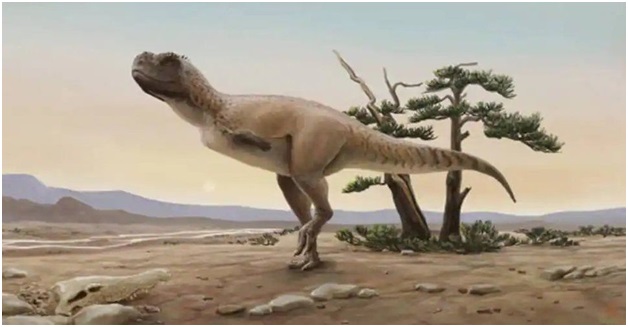
- 25 Nov 2023
Why is it in the News?
Brazil's geological service recently announced a new species of dinosaur, a speedy animal that lived in the desert during the early Cretaceous period.
About Farlowichnus Rapidus:
- The new species of dinosaur was a small carnivorous animal about the size of a modern-day seriema bird, or about 60-90 cm (2-3 feet) tall.
- it was a very fast reptile that ran across the ancient dunes.
- These fossilized dinosaur "trackways," were first found in the 1980s by Italian priest and paleontologist Giuseppe Leonardi in the city of Araraquara, in Sao Paulo (Brazil).
- It lived during the early Cretaceous period.
About Cretaceous Period:
- The Cretaceous Period, spanning from approximately 145 to 66 million years ago, represents the third and final epoch of the Mesozoic Era.
- It is characterized by significant geological and biological events.
- The climate was generally warm, and the world's continents were positioned closer to their present locations.
- The Cretaceous witnessed the proliferation of diverse and iconic dinosaurs, including the formidable Tyrannosaurus rex and the enormous herbivorous sauropods.
- Additionally, flowering plants, or angiosperms, experienced a remarkable evolutionary expansion during this period, transforming terrestrial ecosystems.
- Towards the end of the Cretaceous, a catastrophic event, possibly a large asteroid impact, led to the mass extinction of dinosaurs and numerous other species, marking the boundary between the Cretaceous and the subsequent Paleogene Period.
- This extinction event profoundly shaped the course of Earth's biological evolution.
Deepfakes (TOI)
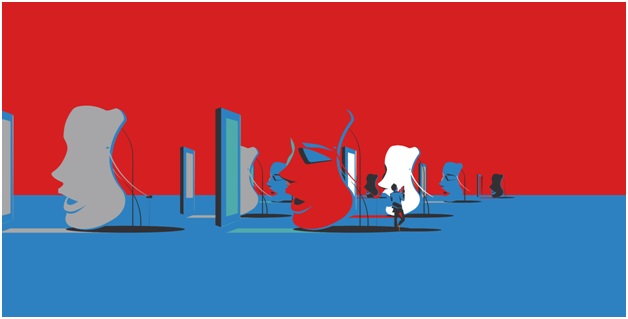
- 25 Nov 2023
Why is it in the News?
The government has warned top social media and internet companies that their platforms may be temporarily suspended and even be ordered blocked in case they are unable to tackle the menace of deepfakes.
What are Deepfakes?
- The term "deepfake" combines the concepts of deep learning with the fabrication of content.
- Deepfakes involve the creation of synthetic images and audio using machine-learning algorithms, intending to disseminate misleading content by replacing a real person's appearance, voice, or both with artificially generated likenesses or voices.
- These manipulated creations can either depict nonexistent individuals or simulate real people engaging in actions or utterances they never did.
- Originating in 2017, the word "deepfake" emerged when a Reddit user named "deepfakes" shared explicit videos featuring celebrities.
- The process of crafting deepfakes utilizes machine learning models employing neural networks to manipulate visual and auditory elements.
- To generate a convincing deepfake video, creators train the neural network on extensive real footage of the targeted person, facilitating a realistic understanding of their appearance from various angles and lighting conditions.
- This trained network is then combined with computer graphics to overlay the person onto a different actor.
- Regrettably, this technology is increasingly exploited for malicious purposes, including scams, celebrity impersonation, election interference, social engineering, disinformation attacks, identity theft, and financial fraud.
- The distinguishing factor of deepfakes lies in their challenging detection due to their sophisticated nature.
Sundarbans Tiger Reserve (STR) (Indian Express)
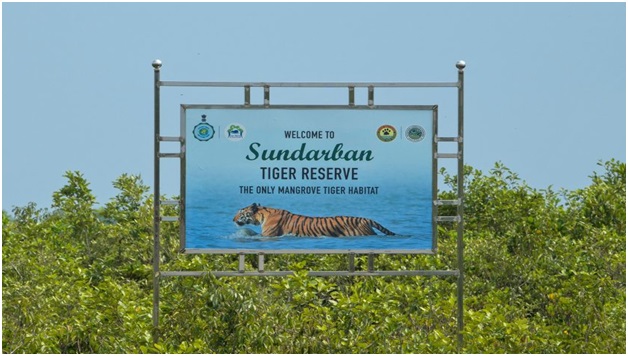
- 25 Nov 2023
Why is it in the News?
The annual tiger census in West Bengal’s Sundarbans is scheduled to commence on November 27.
About Sundarbans Tiger Reserve (STR):
- Sundarbans Tiger Reserve (STR) is situated in the coastal districts of West Bengal, i.e. South 24- -Parganas and part in North 24-Parganas.
- It lies at the southernmost extremity of the lower Gangetic delta bordering the Bay of Bengal.
- It is one of the first nine Tiger Reserves declared under the Project Tiger scheme in the year 1973.
- It is the only mangrove forest throughout the world (besides Bangladesh) to harbour a significant tiger population.
- Borders: The Sundarbans Tiger Reserve is bound on the east by the international boundary with Bangladesh formed by the rivers Harinbhanga, Raimangal, and Kalindi.
- On the south lies the Bay of Bengal.
- The western border is formed by the river Matla, which acts as a common boundary with the territorial Forest Division of South 24- Parganas.
- Towards the northwest, the area is bound by rivers Bidya and Gomdi.
- The Sundarban Tiger Reserve is a part of the Sundarban Biosphere Reserve.
- It harbours significant populations of the river terrapin (Batagur baska), which was once believed to be extinct.
- It is the nesting ground for marine turtles like Olive Ridley (Lepidochelys olivacea), Green sea turtle (Chelonia mydas), and Hawksbill turtle (Eretmochelys imbricata).
- Flora: These comprise true mangroves or major elements, minor elements of mangroves or/and mangrove associates, shrubs, non-halophytic non-mangrove associates, halophytic herbs, shrubs, weeds, epiphytes, and parasitic plants.
- Fauna: It is to a large number of endangered and globally threatened species like the tiger (Panthera tigris tigris), fishing cat (Prionailurus viverrina), and estuarine crocodile (Crocodilus porosus), Gangetic (Platanista gangetica) and Irrawaddy Dolphin (Oracella brevirostris), king cobra (Ophiophagus hannah), water monitor lizard (Varanus salvator), etc.
Black-spotted Croaker, or the Ghol Fish (Indian Express)
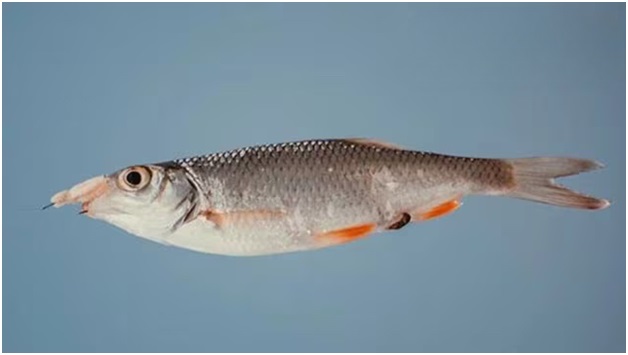
- 24 Nov 2023
Why is it in the News?
The black-spotted croaker, or the ghol fish — considered a fisherman’s lottery — was declared the state fish of Gujarat on Tuesday.
About Ghol Fish:
- The Ghol fish is a rare and valuable marine species known for its richness in essential nutrients such as iodine, omega-3, DHA, EPA, iron, taurine, magnesium, fluoride, and selenium.
- Habitat: Typically found in the Indo-Pacific region, stretching from the Persian Gulf to the Pacific Ocean, the Ghol fish thrives in the marine areas of Gujarat and Maharashtra in India, exhibiting a distinctive golden-brown color.
- Size and Price: With a length of around one-and-a-half meters, the Ghol fish's price increases with its size, reaching up to Rs 5 lakh per unit length.
- Referred to as 'Sea Gold,' the Ghol fish earns this moniker due to a pouch in its stomach with potent medicinal properties, making it highly valued in the overseas market.
- Health Benefits:
- Eye Health: Rich in vitamins, minerals, and proteins, the Ghol fish contributes to maintaining eyesight.
- Anti-Ageing: The collagen content in the fish helps prevent wrinkles, preserving skin elasticity.
- Cognitive Development: The omega-3 content supports the growth of brain cells, enhancing the IQ of infants if consumed regularly.
- Muscle Toning: The fish is known for its muscle-toning properties.
- Economic Value: In high demand for both its meat and air bladder (sold separately), the Ghol fish serves various purposes, from culinary use to making beer and wine, with its air bladder finding applications in pharmaceuticals.
Psyche Mission (Indian Express)
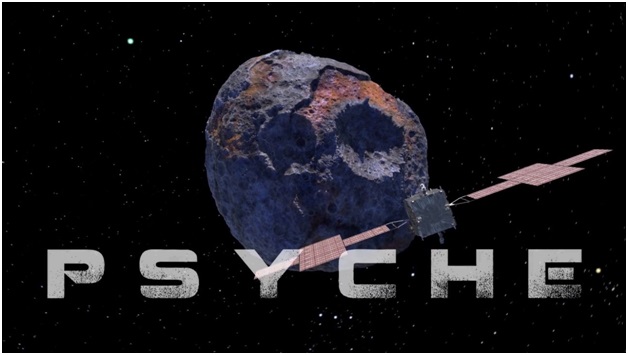
- 24 Nov 2023
Why is it in the News?
A NASA experiment on the Psyche spacecraft has beamed back a near-infrared laser that contains test data from almost 16 million kilometers away.
About the Psyche Mission:
- Psyche is a NASA mission to study a metal-rich asteroid ‘Psyche’, located in the main asteroid belt between Mars and Jupiter.
- The mission launched on October 13, 2023, from Kennedy Space Center and will arrive at Psyche in August 2029.
- The spacecraft will orbit the asteroid for about two years, studying its geology, composition, and magnetic field.
- Scientists believe that Psyche may be the exposed core of an early planet that never fully formed.
- If so, studying Psyche could provide important insights into the formation of our solar system.
- It is also the first in a series of NASA science missions to be the primary payload launched on a SpaceX Falcon Heavy rocket.
- The goals of the Psyche mission are to:
- Understand the composition and structure of a metallic asteroid.
- Determine how Psyche formed and evolved.
- Learn more about the formation of planetary cores.
- The Psyche spacecraft is a solar-powered spacecraft that uses Hall effect thrusters for propulsion.
- The spacecraft also carries a suite of scientific instruments, including:
- A magnetometer to measure Psyche's magnetic field.
- A spectrometer to measure the composition of Psyche's surface.
- A gamma-ray spectrometer to measure the abundance of elements on Psyche's surface.
Mythimna Separata (DownToEarth)
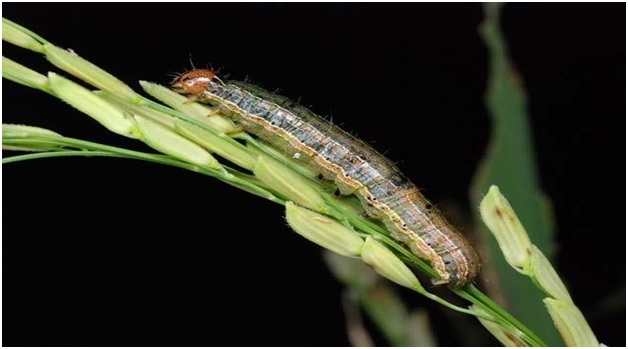
- 24 Nov 2023
Why is it in the News?
Persistent high temperatures over an extended period might be responsible for the severe infestation of the Mythimna separata pest in Assam, causing damage to paddy crops in at least 15 districts.
About Mythimna Separata:
- This is a common long-distance migratory insect and a significant pest for various grain crops.
- Distribution: Mythimna separata is widely distributed in tropical and subtropical regions of Asia, including China, Japan, Southeast Asia, India, and eastern Australia.
- It has also been introduced to New Zealand and some Pacific islands.
- In India, it was initially identified as a sporadic pest in Tamil Nadu in 1937 and later in Kerala and Odisha in 1957.
- Known by various names such as the ear-head-cutting caterpillar, rice ear-cutting caterpillar, or armyworm, this pest feeds on leaves and has the capability to cut off panicles from the base of a crop plant.
- Its feeding habits often leave the field resembling it has been grazed by cattle.
- During an outbreak, the pest multiplies rapidly and moves in swarms from one field to another, similar to an army, causing harm to crops.
- The pest population tends to increase under favorable conditions, particularly when there is a rise in temperatures coupled with dryness.
Investor Risk Reduction Access platform (Indian Express)
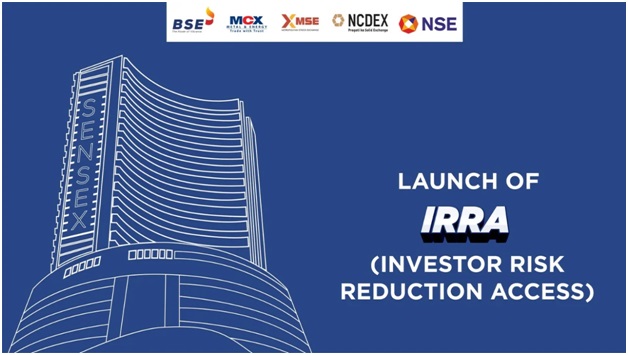
- 24 Nov 2023
Why is it in the News?
Recently, the chairperson of the Securities and Exchange Board of India (SEBI) launched the Investor Risk Reduction Access platform.
About the Investor Risk Reduction Access Platform:
- The Investor Risk Reduction Access Platform is created to make investing safer, especially when technical issues occur at the trading member's end, both at the primary site and the disaster recovery site.
- Its purpose is to let investors close their open positions and cancel pending orders using the IRRA platform when technical problems or unexpected outages make the trading member's site inaccessible.
- It's designed to minimize risks for investors involved in the market.
- The platform is not for making new positions or orders;
- its role is solely to cancel pending orders.
- This platform is accessible to trading members supporting internet-based trading (IBT) and Security Trading through Wireless Technology (STWT) for their investors.
- However, it is not available for algo trading and institutional clients.
- All major stock exchanges – BSE, NSE, NCDEX, MCX, and Metropolitan Stock Exchange of India (MSE) – have collaborated to develop this platform.
- Stock exchanges can keep an eye on factors such as connectivity, order flow, and social media updates.
- They can independently activate the IRRA service if necessary, without waiting for a request from the trading member.
Global Digital Public Infrastructure Repository (Financial Express)
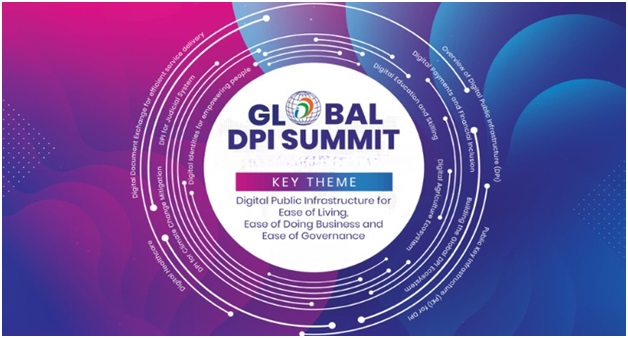
- 24 Nov 2023
Why is it in the News?
Prime Minister announced the launch of two India-led initiatives: the Global Digital Public Infrastructure Repository and a Social Impact Fund aimed at promoting the development of Social Impact Fund to advance Digital Public Infrastructure (DPI) in the Global South during the Virtual G20 Leaders’ Summit on 22nd November 2023.
About the Global Digital Public Infrastructure Repository:
- It was developed by the Ministry of Electronics and Information Technology (MeitY).
- It is an extensive resource center that combines knowledge and insights from G20 members and visiting countries.
- Its primary objective is to fill the knowledge gap in the decision-making processes and methodologies necessary for designing, constructing, deploying, and governing Digital Public Infrastructures (DPIs).
- The GDPIR presents information in a standardized format from countries and organizations that have successfully implemented DPIs on a large scale.
- This includes elements such as maturity scales, source codes (where available), and governance frameworks.
- Currently, the GDPIR showcases 54 DPIs from 16 countries.
- The DPIs from India featured in the GDPIR include
- Aadhaar, Unified Payments Interface (UPI), eSanjeevani, Ayushman Bharat Digital Mission (ABDM), DigiLocker, Umang, Co-WIN, Government e-marketplace, API Setu, Diksha, E-Hospital and Poshan Tracker etc.
What about the Social Impact Fund?
- The fund will financially support countries developing DPIs, providing “upstream technical and non-technical assistance”.
- The platform allows other governments, international organisations, and philanthropies to contribute to the fund too.
- India has pledged an initial commitment of $25 million (USD) to the fund.
Nugu Wildlife Sanctuary (The Hindu)
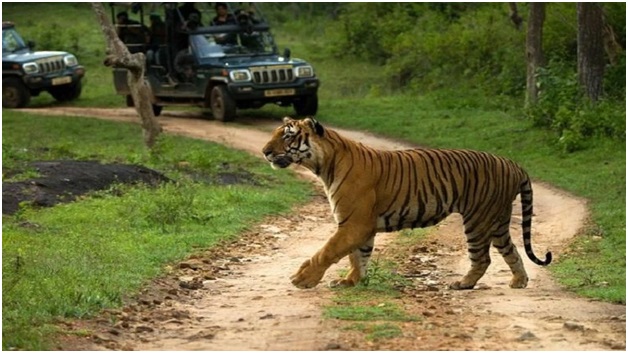
- 23 Nov 2023
Why is it in the News?
The National Tiger Conservation Authority (NTCA) has recommended to the authorities that the Nugu Wildlife Sanctuary abutting the Bandipur Tiger Reserve be declared as a core critical tiger habitat.
About Nugu Wildlife Sanctuary:
- The Nugu Wildlife Sanctuary is situated in the Heggadadevanakote Taluk of Mysore district in Karnataka and comprises the Lakshmanapura State Forest.
- In 1974, Nugu was declared as a Wildlife Sanctuary and later during the year 2003-2004, the area of Nugu Wildlife Sanctuary was added to the Nilgiri Biosphere Reserve.
- On the western side of the sanctuary lies the backwater of Nugu Dam which forms the part of the Nugu Wildlife Sanctuary.
- On the southwestern side, the area touches the Alaganchi State Forest which comes under the Bandipur Tiger Reserve.
- During the summer, elephants migrate from the adjoining area and congregate on the foreshore area because here, the backwater recedes and the area becomes temporary vast grassland due to the availability of fodder and water.
Geology of Nugu Wildlife Sanctuary:
- The Nugu region has red loamy type of soil with boulders.
The climate of Nugu Wildlife Sanctuary:
- The climate in the Nugu Wildlife Sanctuary is of moderate type with the temperature ranging between14°C to 38°C.
- The area receives rainfall both from southwest and northeast monsoons.
- The average amount of rainfall received in this area is 1000mm.
- Flora: The flora of the Nugu Wildlife Sanctuary is similar to that of the Bandipur National Park.
- The forests comprise southern mixed deciduous trees and dry deciduous scrubs.
- Some of the tree species found in this region include Dipterocarpus indicus, Calophyllum tomentosum, and Hopea parviflora.
- Fauna: Nugu Wildlife Sanctuary has a vast list of fauna with a wildlife population that includes elephants, wild boar, jungle cats, tigers, leopard, bonnet macaque, small Indian civet, back nappe hare, along with reptiles like the marsh crocodile, monitor lizard, cobra, rat snake, etc.
- With the adoption of the Wildlife Protection Act of 1972, hunting and poaching is banned and illegal in this sanctuary.
- In recent times, the Nugu Wildlife Sanctuary has been declared to be an eco-sensitive zone, which means there will be no commercial or industrial activity including mining in this area.
Tantalum (NewsOnAir)
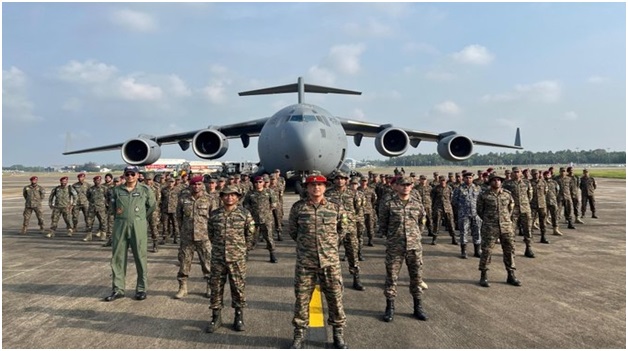
- 23 Nov 2023
Why is it in the News?
The Indian Armed Forces contingent comprising 81 personnel departed for Australia on Wednesday to take part in the second edition of Joint Military Exercise AUSTRAHIND-23.
About Exercise AUSTRAHIND-23:
- Exercise AUSTRAHIND-23 was established in 2022, with its first edition held in Mahajan, Rajasthan.
- It is planned as an annual training event, alternating between India and Australia.
- The primary goal of the exercise is to cultivate collaborative partnerships and share best practices between the two sides.
- This year, the exercise is scheduled to take place in Perth, Australia, spanning from November 22nd to December 6th, 2023.
- The Indian Army contingent, consisting of 60 personnel from a Gorkha Rifles battalion, will actively participate in this exercise.
- A key focus is on promoting interoperability during multi-domain operations in urban and semi-urban terrain, aligned with Chapter VII of the United Nations on peacekeeping operations.
- The joint exercise serves as a platform for exchanging ideas and collectively rehearsing tactics, techniques, and procedures for conducting tactical operations.
- Additionally, the exercise contributes to fostering understanding between the two militaries, further strengthening defense cooperation between the two friendly nations.
Other Exercises between India and the Aus:
- AUSINDEX - Naval exercise between India and Australia
- Exercise Pitch Black - It is a biennial warfare exercise hosted by the Royal Australian Air Force (RAAF).
Inter Command Ocean Sailing Race 2023 (NewsOnAir)
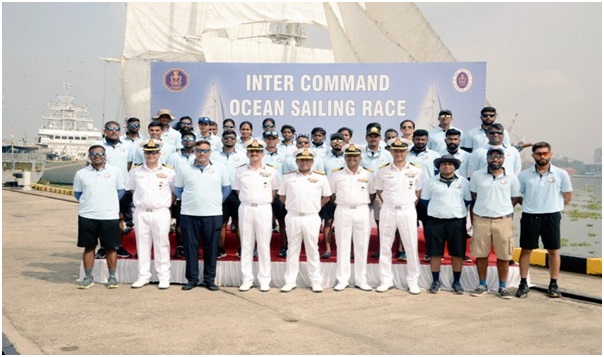
- 23 Nov 2023
Why is it in the News?
The second edition of the Inter-Command Ocean Sailing Race to Goa was flagged off from the Naval Base in Kochi on Wednesday.
About the Inter Command Ocean Sailing Race 2023:
- The Inter Command Ocean Sailing Race 2023 features four 40-footer sailboats for an exciting journey in the Arabian Sea which was:
- INSV Bulbul
- INSV Neelkanth
- INS Kadalpur, and
- INSV Hariyal
- Each boat has a team of eight people from three naval commands and a combined team from Andaman and Nicobar Command, including the Delhi area.
Details of the Race:
- Distance and Route: The race covers around 667km from Naval Base, Kochi, to Goa in about five days.
- Engine-Free Journey: Boats will use the wind to reach Goa without engines.
- Inclusive Crew: This edition includes both men and women officers and sailors, promoting equal opportunities.
- Competition: With 32 participants, each competing for the title, the boats will navigate through the Arabian Sea's currents and winds.
Organizational Framework:
- Event Host: The Southern Naval Command organizes the race with the Indian Naval Sailing Association in New Delhi.
- Coordination: The Indian Navy’s Offshore Sailing Club in Kochi and the Ocean Sailing Node in INS Mandovi, Goa, coordinate the event.
- Purpose: The race helps the Navy improve risk management and technical skills while fostering a spirit of adventure among the crew.
Rapid Innovation and Startup Expansion (RISE) (Financial Express)
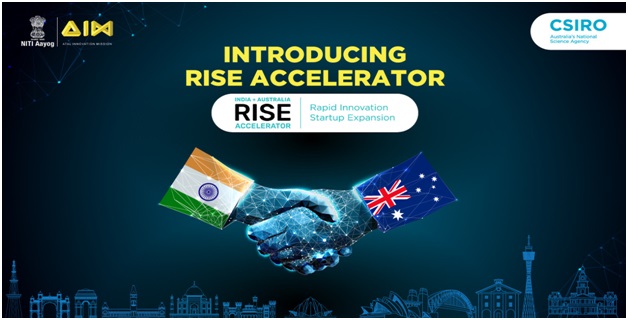
- 23 Nov 2023
Why is it in the News?
The AIM and NITI Aayog have recently introduced a new accelerator known as Rapid Innovation and Startup Expansion (RISE) aimed at providing support to startups in the circular economy sector in both Australia and India.
About Rapid Innovation and Startup Expansion (RISE):
- RISE, a collaborative initiative between Australia’s national science agency (CSIRO), and Atal Innovation Mission (AIM), the Government of India’s flagship initiative for fostering innovation and entrepreneurship, is a dedicated accelerator.
- This program is designed to support startups and small to mid-sized enterprises (SMEs) in India and Australia focusing on circular economy technologies and solutions.
Key Highlights:
- Focus Themes: The RISE Accelerator targets startups in India and Australia engaged in circular economy technologies, specifically in:
- Climate Smart Agriculture
- Clean Energy
- Circular Economy and Waste Management, and
- Climate Smart Mobility.
- Nine-Month Program: Over the course of nine months, the RISE Accelerator aims to assist startups in navigating early steps in a new region, establishing connections with the right partners, customers, and talent, and building credibility to succeed in international markets.
- First Round Focus: In its initial round, the accelerator concentrates on supporting startups and SMEs involved in technologies and solutions related to waste and the circular economy.
- Financial Support: Participating startups have the opportunity to receive up to INR 40,00,000 in non-equity grants.
- Future Rounds: Subsequent rounds of the accelerator will shift focus to climate-smart agriculture, clean energy, and climate-smart mobility.
New Frog Species- Music Frog (The Hindu)
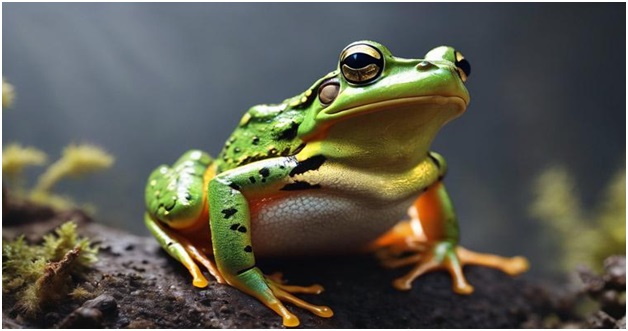
- 23 Nov 2023
Why is it in the News?
Recently, scientists have discovered a new species of 'music frog' in Arunachal Pradesh.
About the New Frog Species:
- Scientists discover a new 'music frog,' Nidirana noadihing, in Arunachal Pradesh.
- Both male and female frogs are vocal with a unique call pattern of two-three notes.
- The discovery was made during field surveys in the Changlang and Lohit districts in August-September.
- Male frogs with 'robust' bodies were found calling loudly in vegetation near water bodies.
- The new species is named after the Noa-Dihing River, near where it was discovered.
- The species confirms the presence of the Nidirana genus in India for the first time.
- Nidirana species are known in Japan, Taiwan, China, Vietnam, Laos, and Thailand.
- Appearance: The amphibians have "irregularly shaped and sized spots" on their eyelids and they have dark stripes around their moderately large eyes.
- Their pupils are gold-rimmed and their irises are dark brown and have a golden spackle.
- Habitat: Noa-Dihing Music Frogs inhabit swamps, ponds, and paddy fields, constructing nests for egg laying.
- The discovery emphasizes the importance of exploring specialized habitats like marshlands, often overlooked in scientific studies.
Naval Anti-Ship Missile Short Range (NASM-SR) (TOI)
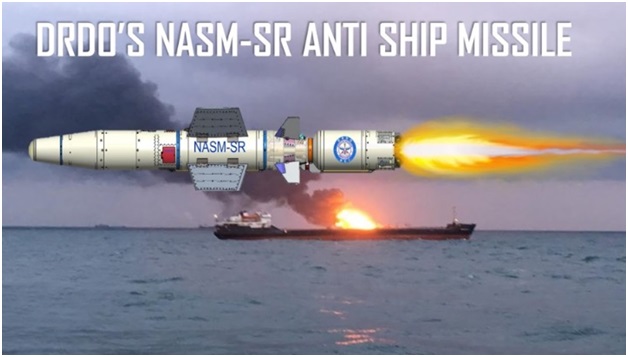
- 22 Nov 2023
Why is it in the News?
The Indian Navy successfully test-fired an indigenous anti-ship missile over the Arabian Sea, marking a significant step in India's efforts towards self-reliance in defense technologies.
About Naval Anti-Ship Missile Short Range (NASM-SR):
- This revolutionary missile NASM-SR, entirely developed by Indian scientists and engineers, represents a huge stride in the indigenization of India's defense infrastructure.
- The project is a collaborative effort between various esteemed agencies, including the Defense Research and Development Organisation (DRDO).
- The successful trial brings a sense of pride and accomplishment to India's defense realm.
- Launch Capability: This advanced missile is designed for launch from attack helicopters, presenting a versatile addition to the naval arsenal.
- Replacement for Sea Eagle: NASM-SR is slated to replace the existing Sea Eagle missiles currently in use by the Navy, aligning with the imperative of modernization and technological advancement.
- Integration with MH-60R Helicopters: As Sea King helicopters are phased out, the NASM-SR is anticipated to integrate seamlessly with the new MH-60R multi-role helicopters, a pivotal component of the Navy's evolving fleet.
Key Features:
- The missile incorporates a state-of-the-art guidance system and integrated avionics.
- It introduces indigenous launcher technology tailored for helicopter deployment.
- Possessing a striking range of approximately 60 km.
- Travels at a speed of Mach 0.8, slightly below the speed of sound.
- Equipped with a 100kg warhead, rendering it capable of neutralizing patrol boats and causing substantial damage to larger warships.
- Employs an imaging infrared seeker to target heat emissions, enhancing precision in homing onto its designated targets.
- During the approach to its target, the NASM-SR operates at just 5 meters above sea level, a strategic feature known as sea skimming.
- This low-level approach minimizes the susceptibility to detection, tracking, and interception by enemy radars or surface-to-air missiles.
Exercise Vajra Prahar 2023 (The Hindu)
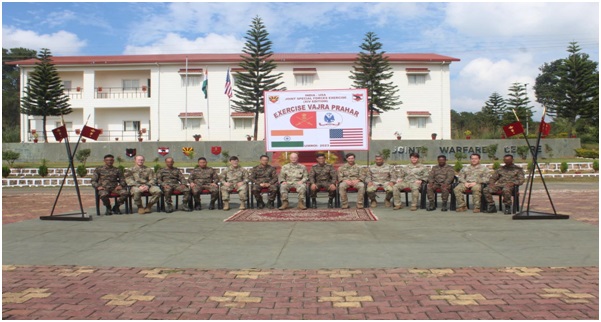
- 22 Nov 2023
Why is it in the News?
A joint exercise of the special forces of India and the United States commenced in Meghalaya’s Umroi Cantonment on Tuesday.
About Exercise Vajra Prahar 2023:
- Exercise Vajra Prahar is a collaborative effort between the Indian Army and the US Army Special Forces.
- It is the 14th such exercise aimed at sharing the best practices and experiences in areas such as joint mission planning and operational tactics
- Representing the US, personnel from the 1st Special Forces Group (SFG) of the US Special Forces are actively engaged.
- The Indian Army contingent, led by Special Forces personnel from the Eastern Command, contributes to this joint training effort.
- The first edition took place in India in 2010, and the 13th edition occurred at the Special Forces Training School (SFTS), Bakloh (HP).
- This continuity highlights the longstanding commitment to strengthening Indo-US defense ties.
- The 14th edition is currently underway at Umroi Cantonment, Meghalaya, spanning from 21st November to 11th December 2023.
- This location serves as the backdrop for intensive training and cooperation.
- Exercise Vajra Prahar serves as a crucial platform to enhance inter-operability between the Indian and US armies.
- This emphasis on seamless coordination aims to bolster defense cooperation and strategic alignment.
Other Exercises between India and the USA:
- YUDHABHAYAS- Army
- VAJRA PRAHAR- Army
- Exercise MALABAR (Multilateral)- Indian Navy
- RED FLAG 16-1- Air Force
- Exercise COPE India 23- Air Force
Risk weight (LiveMint)
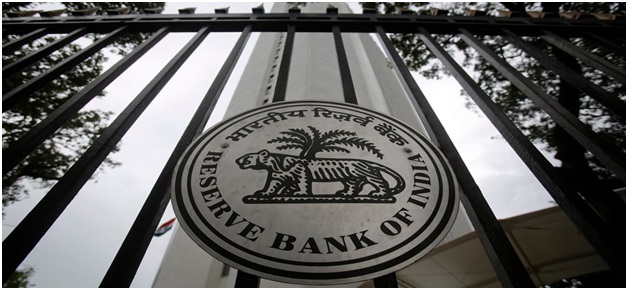
- 22 Nov 2023
Why is it in the News?
Spooked by the strong growth in unsecured loans to consumers, the Reserve Bank of India (RBI) has increased the cost of funds for banks and non-bank financial companies (NBFCs), by increasing the risk weight of such loans.
What are Risk Weights?
- Every rupee lent by the bank is a cost or has an implication on its capital position.
- Depending on the nature of the loan and the inherent risk associated with it, risk weights are attributed.
- Banks have to ensure that their capital is enough to cover these risk-weighted assets.
- Total assets as disclosed in the financials and total risk-weighted assets are different things.
- Each asset class has varying risk weights.
- For instance, risk weights for home loans could range from 50 percent to 75 percent, for gold loans it is 75 percent.
- Corporate loans are charged 100 percent given the risk they carry.
How do they affect borrowers?
- Lower the risk weight, and lower the rate of interest. This is the thumb rule.
- Therefore, risk weights impact borrowers indirectly and are felt through the pricing of loans.
- For instance, home loans have the lowest interest rate among retail products because lower risk weights allow banks to pass on the advantage of capital consumption.
- Personal loans and credit cards have the highest interest rate because of their tenure and charge on capital.
Gambusia Fish (The Hindu)
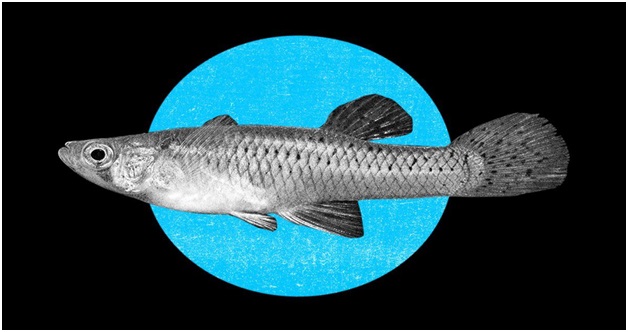
- 22 Nov 2023
Why is it in the News?
Government and non-government groups in Andhra Pradesh, Odisha, and Punjab have recently put Gambusia fish into local water sources to deal with mosquito issues.
About Gambusia fish:
- Gambusia, also known as mosquitofish, is a genus of small, freshwater fish in the family Poeciliidae.
- There are over 40 species of Gambusia, most of which are found in North America, Central America, and the Caribbean.
- Gambusia fish are known for their voracious appetite for mosquito larvae, and they have been widely introduced around the world for mosquito control.
- They are small, with females typically reaching a maximum length of 7 cm and males a maximum length of 4 cm.
- They have a slender body with a pointed snout and a small mouth.
- They are typically green or silver in color, with some species having dark spots on their sides.
- Gambusia fish are livebearers, meaning that they give birth to live young.
- Females can produce up to 1,000 fries (baby fish) per year.
- They are opportunistic feeders and will eat a variety of foods, including mosquito larvae, small insects, and zooplankton.
- Gambusia fish have been introduced to many parts of the world for mosquito control.
- However, they have also been shown to have negative impacts on native fish populations.
- In some cases, Gambusia fish have been known to outcompete and displace native fish species.
- The International Union for Conservation of Nature (IUCN) declares Gambusia one of the 100 worst invasive alien species in the world.
Tantalum (Indian Express)

- 22 Nov 2023
Why is it in the News?
A team of researchers from the Indian Institute of Technology (IIT), Ropar has found the presence of tantalum, a rare metal, in the Sutlej river sand in Punjab.
What is Tantalum?
- Tantalum is a rare metal with the atomic number 73.
- Tantalum was first discovered by Anders Gustaf Ekenberg, a Swedish chemist, in 1802.
- It has been named after a Greek mythological figure Tantalus.
Properties:
- It’s grey, heavy, very hard, and one of the most corrosion-resistant metals in use today.
- It possesses high corrosion resistance because when exposed to air, it forms an oxide layer that is extremely difficult to remove, even when it interacts with strong and hot acid environments.
- When pure, tantalum is ductile, meaning it can be stretched, pulled, or drawn into a thin wire or thread without breaking.
- Moreover, it “is almost completely immune to chemical attack at temperatures below 150°C, and is attacked only by hydrofluoric acid, acidic solutions containing the fluoride ion, and free sulphur trioxide.
- Notably, tantalum also has an extremely high melting point, exceeded only by tungsten and rhenium.
Applications:
- Tantalum is most prominently used in the electronic sector.
- The capacitors made from tantalum are capable of storing more electricity in smaller sizes without much leakage than any other type of capacitor.
- This makes them ideal for use in portable electronic devices such as smartphones, laptops, and digital cameras.
- As tantalum has a high melting point, it is frequently used as a substitute for platinum, which is more expensive.
- The rare metal is also used to make components for chemical plants, nuclear power plants, aeroplanes, and missiles.
- Tantalum does not react with bodily fluids and is used to make surgical equipment and implants, like artificial joints.
Government bans anti-cold drug combination for kids aged under four (Indian Express)

- 21 Dec 2023
Why is it in the News?
The Central Drugs Standard Control Organisation (CDSCO) has prohibited the use of anti-cold fixed drug combinations in children below four years of age.
What are Fixed Dose Combination (FDC) Drugs?
- Fixed-dose combination (FDC) drugs, also referred to as combination products, embody a formulation containing two or more active drugs within a single dosage form.
- The United States Food and Drug Administration (FDA) defines a combination product as a composition involving a drug and a device, a biological product and a device, or a combination of a drug, device, and biological product.
- While the conventional approach favours formulating drugs as single compounds, the acceptance of fixed-ratio combination products hinges on two key criteria:
- Dosage Requirements: Each ingredient in the combination must meet the dosage criteria tailored to a specific population group.
- Proven Advantages: The combination should demonstrate a clear advantage over administering individual compounds separately in terms of therapeutic effect, safety, or compliance.
- FDCs have witnessed significant popularity in the Indian pharmaceutical market, experiencing notable growth in recent years.
About the Central Drugs Standard Control Organization (CDSCO):
- The Central Drugs Standard Control Organization (CDSCO) serves as the National Regulatory Authority (NRA) in India, overseeing the medical devices industry per the Drugs & Cosmetics Rules.
- Positioned under the Ministry of Health & Family Welfare, it is led by the Drugs Controller General of India (DCGI) with its headquarters situated in New Delhi.
- Operationalizing under the provisions of the Drugs and Cosmetics Act, CDSCO is entrusted with several crucial responsibilities, including the approval of new drugs, the facilitation of clinical trials, the establishment of standards for drugs, ensuring control over the quality of imported drugs, and coordination of activities among State Drug Control Organizations.
- One of its significant roles lies in collaboration with state regulators for granting licenses related to specialized categories of critical drugs.
- These encompass vital medical components such as blood and blood products, I.V. fluids, vaccines, and sera.
- The CDSCO plays a pivotal role in upholding standards, ensuring quality, and fostering coordination across the regulatory landscape for the benefit of public health in India.
Why the UK banned Air France, Lufthansa, and Etihad ads over ‘greenwashing’ claims (Indian Express)
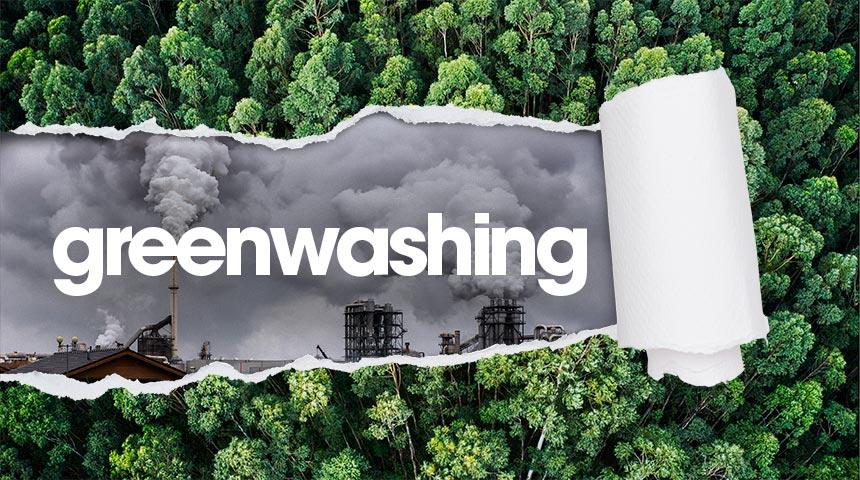
- 21 Dec 2023
Why is it in the News?
Earlier in December, the United Kingdom’s ad regulator banned advertisements from Air France, Lufthansa, and Etihad for allegedly misleading consumers regarding the environmental impact of air travel.
What is Greenwashing?
- Greenwashing is the deceptive practice of creating a false impression or providing misleading information about the environmental sustainability of a company's products.
- It involves making unverified claims to lead consumers to believe that a company's products are more environmentally friendly or have a more positive impact on the environment than is accurate.
- Furthermore, greenwashing can occur when a company highlights the sustainable aspects of a product to divert attention from its involvement in environmentally harmful practices.
- Companies may employ greenwashing tactics by using vague claims that lack substantiated data or scientific validation.
- For instance, a car vendor might assert that a vehicle is eco-friendly due to increased fuel efficiency, conveniently overlooking or downplaying the broader environmental impact of vehicle manufacturing processes.
What are the Concerns With Greenwashing?
The practice of greenwashing raises apprehensions on several fronts:
- Authenticity of Climate Goals: There is a risk of undermining the authenticity of climate goals when misleading or exaggerated information about environmental initiatives is presented.
- Unwarranted Recognition and Benefits: Entities involved in greenwashing may receive undeserved recognition or benefits, potentially rewarding irresponsible behaviour and discouraging genuine sustainability efforts.
- Market Distortion: Greenwashing can distort markets by creating an uneven playing field.
- Entities engaging in deceptive practices might gain an unfair advantage over those genuinely adhering to stringent environmental standards.
- Lack of Comprehensive Regulations: The absence of comprehensive regulations and standards for environmental claims allows greenwashing to persist without adequate scrutiny, contributing to a lack of transparency.
- Challenges to Carbon Credit Systems: The practice of greenwashing introduces challenges to the integrity of carbon credit systems.
- This is particularly evident in informal markets, where the expansion of credit sources and certification by unofficial entities raise concerns about transparency and reliability.
- It's crucial to note that in the context of carbon credits, one credit represents the removal of one metric ton of carbon dioxide or equivalent greenhouse gases from the atmosphere.
- The concept of carbon credits was introduced by the Kyoto Protocol, providing rewards to countries or firms surpassing emission reduction mandates.
Global Initiatives Addressing Greenwashing:
- During the 27th Conference of Parties (COP27), the United Nations Secretary-General declared a zero-tolerance stance against greenwashing.
- Private corporations were urged to rectify their practices to align with genuine environmental efforts.
- In a landmark move in October 2023, the European Union approved the world's first green bond standards.
- These standards, under the "European Green Bond" label, mandate transparency and direct 85% of funds towards sustainable activities within the EU.
- The legislation aims to support the EU's transition to climate neutrality.
Laws in India:
- In India, greenwashing is classified as an unfair trade practice under the Consumer Protection Act, 2019.
- This legislation prohibits deceptive claims and outlines penalties and remedies for consumers adversely affected by such misleading practices.
- In February 2023, the Securities and Exchange Board of India (SEBI) issued guidelines for issuers of green debt securities.
- These guidelines are designed to ensure transparency, prevent greenwashing, protect investors, and regulate the development of the securities market.
- The Advertising Standards Council of India (ASCI), a voluntary self-regulatory organization, plays a crucial role in monitoring advertising practices.
- It holds jurisdiction over allegations of greenwashing, ensuring that ads are not only legal but also honest and fair.
- The ASCI's regulatory efforts aim to safeguard consumer interests and promote fair competition within the Indian advertising landscape.
Bhoomi Rashi Portal is revolutionizing land acquisition for Highway projects – Here’s how (Financial Express)
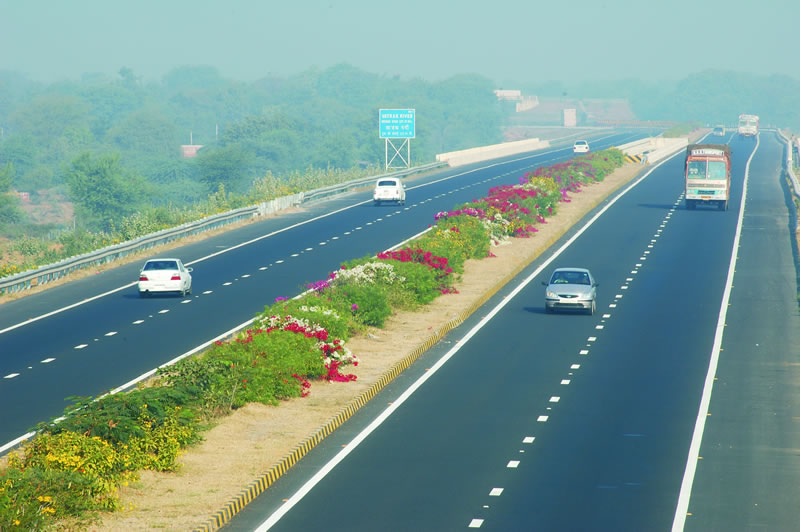
- 21 Dec 2023
Why is it in the News?
Union Minister of Road Transport and Highways Nitin Gadkari revealed in a recent statement to the Rajya Sabha that the Bhoomi Rashi portal is instrumental in expediting the development of highway infrastructure in India.
About the Bhoomi Rashi Portal:
- The acquisition of land was done manually before the year 2018. The data files were moved physically, leading to some limitations. This included delays in issuing notices, errors in land details, etc.
- To overcome the issues, the Ministry of Road Transport and Highways came up with a system.
- It is known as “Bhoomi Rashi”.
- The portal came into force on 1st April 2018
- The system is digital and automates the whole land acquisition (LA) process.
- It made and still makes the LA process more transparent and error-free.
- The portal processes the notices at every stage on a real-time basis.
Key Objectives:
- Acceleration of Land Acquisition: The primary goal is to facilitate a quicker and more efficient land acquisition process for National Highways.
- Centralized Processing: Acting as a singular online platform, it consolidates the processing of land acquisition notifications, contributing to the swift development of highway infrastructure projects.
- Transparency and Accountability: Ensures transparency and accountability throughout the land acquisition process.
- Direct Benefit Transfer: Facilitates the electronic transfer of benefits directly to the accounts of the beneficiaries involved in the land acquisition.
Salient Features:
- Bilingual application with Hindi and English for easy usability
- Preparation of interface for adding basic details of the project, including land acquisition sanction details
- Preparation of interface for Land Acquisition locations. villages
- Preparation of Interface for Competent Authority for Land Acquisition (CALA) details. CALA is a revenue functionary of the State Government appointed for each NH Project.
- Interface for generating land acquisition notification
- Interface for land Details
- Interface for generation of notification: organisational email IDS for all those involved in the process flow to ensure smooth e-office management
- Interface for Objections and processing
- Interface for compensation determination and finalisation
- Interface for land owners and affected parties
- Interface for reports generation
The portal is seamlessly integrated with the Public Financial Management System (PFMS) of the Ministry of Finance, ensuring real-time deposit of compensation into the accounts of affected/interested individuals.
What is Land Acquisition?
- Land acquisition is the governmental process, whether at the state or union level, through which private land is procured for infrastructure development, urbanization, or industrialization.
- In exchange, the government provides appropriate compensation to the landowner based on market value and assumes responsibility for the rehabilitation and resettlement of those affected by the land acquisition.
SAT quashes Sebi's order against Kishore Biyani, and others (Live Mint)

- 21 Dec 2023
Why is it in the News?
The Securities Appellate Tribunal (SAT) on Wednesday quashed regulator Sebi's order banning Future Retail chairperson Kishore Biyani and some other promoters from the securities market for one year in an insider trading case.
About the Securities Appellate Tribunal (SAT):
- Established as a statutory and autonomous entity under the Securities and Exchange Board of India (SEBI) Act, 1992, the Securities Appellate Tribunal (SAT) serves as a crucial forum for adjudicating appeals against decisions made by SEBI or its adjudicating officers.
Key Functions:
- Appeals Jurisdiction: Primarily tasked with hearing appeals against orders issued by SEBI or its adjudicating officers under the SEBI Act.
- Extended Jurisdiction: Additionally, SAT entertains appeals concerning orders from the Insurance Regulatory and Development Authority of India (IRDAI) and the Pension Fund Regulatory and Development Authority (PFRDA) related to cases filed before them.
Composition:
- Presiding Officer: A retired or sitting Supreme Court judge, Chief Justice of a High Court, or a High Court judge with at least seven years of service.
- Judicial Member: High Court judge with a minimum of five years of service.
- Technical Member: Individual with expertise and a minimum of 15 years of experience in the financial sector, including securities market, pension funds, commodity derivatives, or insurance.
- This member can be a senior official in the Central or State Government or a person of proven ability and integrity.
Appointment and Tenure:
- Appointments made by the Central Government in consultation with the Chief Justice of India or its nominee.
- Presiding Officer and members serve a term of five years, eligible for reappointment for an additional term of up to five years.
- No member shall hold office after reaching the age of 70.
Powers and Authority:
- They are empowered with the same powers as a civil court under the code of civil procedure when adjudicating suits.
- Appeals to SAT can be made by any person aggrieved by SEBI or adjudicating officer orders, excluding those made with the consent of all parties.
Appeals Process:
- Appeals against SAT decisions can be filed in the Supreme Court, limited to questions of law.
- No appeal is permissible against orders made with the consent of all parties.
- The SAT, with its specific mandate and composition, plays a pivotal role in ensuring fairness and justice in the regulatory framework of the securities market in India.
What is Insider Trading?
- Insider trading is the act of buying or selling securities of a publicly traded company based on material information not yet disclosed to the public.
- Material information encompasses any data that could significantly influence an investor's decision to buy or sell the security.
- For instance, Consider a scenario where a government employee, possessing knowledge about an upcoming regulation that would favour a sugar-exporting company, takes advantage of this information by purchasing the company's shares before the regulation becomes public knowledge.
MSME Ministry launches 3 sub-schemes under RAMP programme; makes ZED scheme free for women (Financial Express)
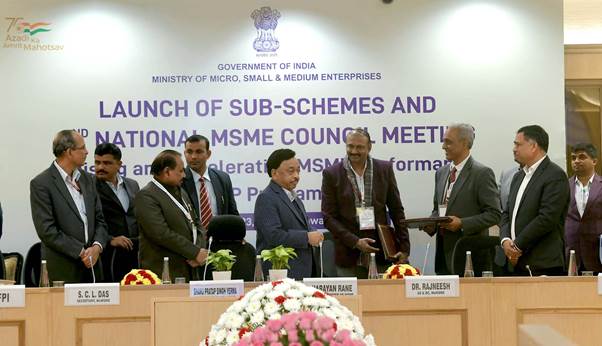
- 21 Dec 2023
Why is it in the News?
MSME Minister Narayan Rane recently launched three sub-schemes under the ministry’s existing RAMP ((Raising and Accelerating MSME Productivity) programme.
About the RAMP Programme:
- The Raising & Accelerating MSME Performance (RAMP) program, supported by the World Bank and inaugurated in 2022, is dedicated to enhancing the performance of micro, small, and medium enterprises (MSMEs) across India.
Program Objectives:
- Market and Credit Access: Facilitate improved access to markets and credit for MSMEs.
- Institutional Strengthening: Enhance institutional and governance structures at both central and state levels.
- Center-State Collaborations: Foster improved linkages and partnerships between central and state entities.
- Delayed Payment Issues: Address challenges related to delayed payments within the MSME sector.
- Greening of MSMEs: Promote sustainable practices and the adoption of green technologies within MSMEs.
- The National MSME Council has been set up by the Ministry to work as an administrative and functional body of the RAMP Programme.
Sub Schemes under RAMP:
- MSME GIFT Scheme: Aims to support MSMEs in adopting green technology through interest subvention and credit guarantee assistance.
- MSE SPICE Scheme: Focuses on promoting circular economy projects, with credit subsidy mechanisms, aligning with the MSME sector's goal of achieving zero emissions by 2070.
- MSE ODR Scheme: A pioneering initiative leveraging modern IT tools and Artificial Intelligence to address delayed payment incidents for Micro and Small Enterprises.
- Implementing Agencies for Sub Schemes:
- MSME GIFT and MSME SPICE Schemes: Small Industries Development Bank of India (SIDBI)
- MSE ODR Scheme: National Informatics Centre Services Inc. (NICSI)
- These sub-schemes, under the RAMP umbrella, signify a comprehensive effort to fortify and propel the growth of MSMEs, incorporating technological advancements and sustainable practices.
Chimaeras (The Hindu)
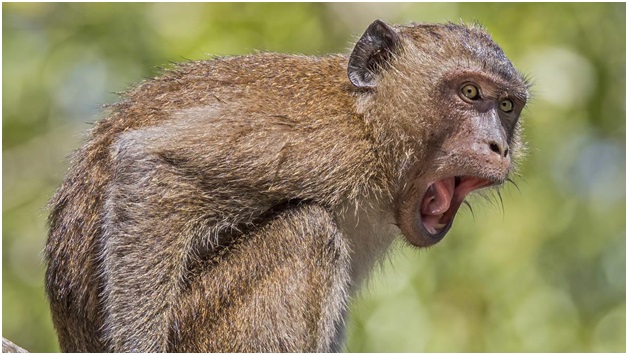
- 21 Nov 2023
Why is it in the News?
In a recent landmark study, scientists reported successfully generating a live chimaera in non-human primates
About Chimaeras:
- A genetic chimaera is a single organism made up of cells from more than one distinct genotype (or genetic makeup).
- Examples of varying degrees of chimerism exist in the animal kingdom.
- For instance, the half-sider budgerigar, a common pet parakeet, displays different colors on each side of its body due to chimerism.
- In anglerfish, the male fuses with the female, eventually being absorbed, creating a single animal with a merged genetic makeup.
- Marine sponges are known to have up to four distinct genotypes in one organism.
- In humans, natural chimaeras occur when the genetic material in one cell changes, leading to a clonal population of cells different from the rest.
- Fusion of two fertilized zygotes early in embryonic development can result in a condition where two genetic makeups coexist in a single individual.
- Chimerism can also arise from twin or multiple pregnancies evolving into a single fetus or a twin fetus being absorbed into a singleton.
Hard Currency (Financial Express)
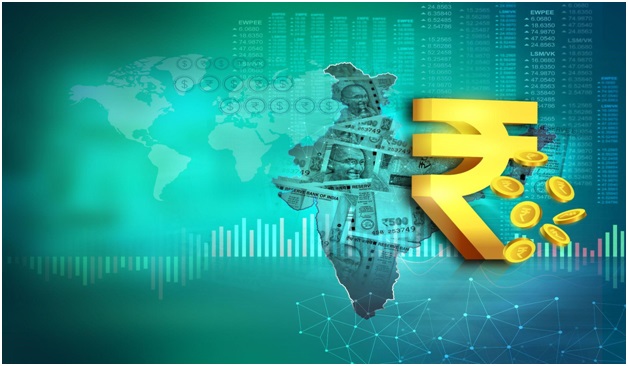
- 21 Nov 2023
Why is it in the News?
Recently, the Global Trade Research Initiative (GTRI) said in a statement that Conditions are not ripe to make INR a hard currency.
What is Hard Currency?
- Usually, developed countries issue hard currency, and this currency is easier to trade and receive funds from other countries or investors from other nations.
Key characteristics of hard currencies:
- Hard currency means a stable currency, and its value does not fluctuate much in the international markets.
- It makes hard money currency easily tradable.
- It is issued by a sound economy. Developed countries issue hard currency and it is accepted by all nations across the world.
- It is highly liquid and several countries prefer to accept hard currency instead of local currency as it has lesser fluctuations and can be easily converted to local currency.
- Hard currency is universally accepted and international investors have a sense of faith in hard currency for trading.
- Countries across the globe consider hard currency as a foreign currency reserve, further adding to its value.
- As hard currency is easily convertible and stable, it is widely used in international exchanges.
- The value of the hard currency does not change much in response to global events.
- When domestic currencies struggle, people start holding on to hard currencies to protect their wealth.
Examples of hard currencies:
- US dollar (USD)
- Euro (EUR)
- Japanese yen (JPY)
- British pound (GBP)
- Swiss franc (CHF) etc.
The E Prime Layer (HT)
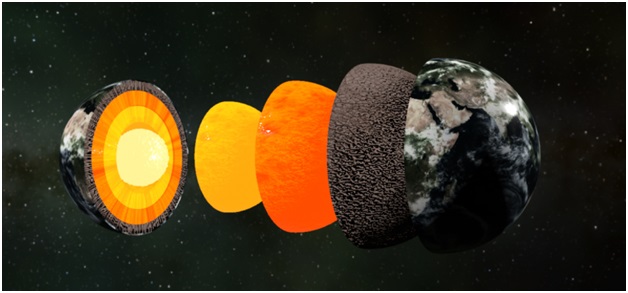
- 21 Nov 2023
Why is it in the News?
Recently, an international team of scientists found a new mysterious layer called the E prime layer on the outer part of the Earth's core.
About the E Prime Layer:
- Before, it was thought that there's only a small exchange of materials between the Earth's core and mantle.
- However, experiments showed that when water reaches the boundary between the core and mantle, it reacts with silicon in the core and creates silica.
Development of this Layer:
- New research proposes that over billions of years, tectonic plates carrying surface water transported it deep into the Earth.
- When this water reaches about 1,800 miles below the surface at the core-mantle boundary, it triggers significant chemical changes, affecting the core's structure.
- Scientists observed that under high pressure, subducted water chemically reacts with core materials.
- This reaction forms a hydrogen-rich, silicon-depleted layer on the outer core, resembling a film.
- Silica crystals produced in this process rise and mix into the mantle, impacting the overall composition.
- Changes in the liquid metallic layer could potentially lead to reduced density and altered seismic characteristics, consistent with anomalies detected by seismologists.
Importance of this Discovery:
- This finding deepens researchers' understanding of the Earth's internal workings, revealing a more extensive and complex global water cycle than previously known.
- The altered core layer has significant implications for the interconnected geochemical processes that link surface water cycles with the deep metallic core.
What is ROV ‘Daksh’? (HT)

- 21 Nov 2023
Why is it in the News?
The Defence Research Development Organisation's robotics team utilized the Remotely Operated Vehicle (ROV) Daksh to aid in the ongoing rescue operations during the Uttarakhand tunnel collapse.
What is ROV Daksh?
- Daksh is a remotely operated vehicle (ROV), designed by the Defence Research & Development Organisation (DRDO) for the recovery of unexploded bombs.
- It can negotiate various hurdles in an urban setting and can also be utilised to survey and monitor nuclear and chemical contamination levels.
- 90% of its components are indigenous.
- It has ladder climbing abilities and can function for three continuous hours, with the capability to operate over distances exceeding 100 to 500 meters.
- It serves the bomb disposal units (BDU) of an army, police, and paramilitary forces, aiding in handling IEDs and other dangerous substances.
- Its manipulator arm can handle hazardous objects weighing up to 20kg from 2.5 meters and 9kg from 4 meters away.
- Daksh demonstrates the ability to climb stairs and maneuver steep slopes, with durable rubber wheels capable of withstanding blast impacts.
- It is equipped with multiple cameras, IED handling tools, nuclear biological chemical (NBC) reconnaissance systems, a master control station (MCS), and a shotgun.
- The equipment is specifically designed for use on a motorized pan-tilt platform, which can help reach the risky terrain.
Atmospheric Waves Experiment (Indian Express)

- 21 Nov 2023
Why is it in the News?
Atmospheric Waves Experiment is a first-of-its-kind NASA experimental attempt aimed at studying the interactions between terrestrial and space weather.
What is the Atmospheric Waves Experiment (AWE)?
- AWE is a first-of-its-kind NASA experimental attempt aimed at studying the interactions between terrestrial and Space weather.
- Planned under NASA’s Heliophysics Explorers Program, the $42 million mission will study the links between how waves in the lower layers of the atmosphere impact the upper atmosphere, and thus, Space weather.
- AWE will be launched and mounted on the exterior of the Earth-orbiting International Space Station (ISS).
- From the vantage point, it will look down at the Earth and record the colourful light bands, commonly known as airglow.
- It will try to understand the combination of forces that drive the Space weather in the upper atmosphere.
- “AWE could open a new window of study, wherein scientists are attempting to understand if Space weather is affected by terrestrial and bottom-up forces.
- It will measure the airglow at mesopause (about 85 to 87 km above the Earth’s surface), where the atmospheric temperatures dip to minus 100 degrees Celsius.
- At this altitude, it is possible to capture the faint airglow in the infrared bandwidth, which appears the brightest enabling easy detection.
- AWE will be able to resolve waves at finer horizontal scales than what satellites can usually see at those altitudes, which is part of what makes the mission unique.
- The health of the ionosphere, whose lower layers sit at the edge of Space, is important for maintaining seamless communication.
- It is still not fully understood if the ionosphere is affected by the transient events or intense perturbations resulting from hurricanes or tornadoes.
- It was expected to launch in the month of August 2022, but the fresh launch is planned for later this month.
Rhododendron (The Hindu)
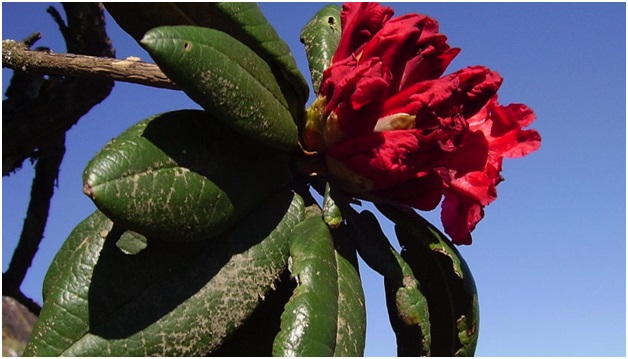
- 20 Nov 2023
Why is it in the News?
Recently rhododendron blooms in parts of Uttarakhand in November, worries experts.
About Rhododendron:
- Rhododendron is a diverse genus of flowering plants, encompassing over a thousand species, which include trees, shrubs, and creepers.
- These woody flowering plants belong to the heath family (Ericaceae) and are recognized for their appealing flowers and handsome foliage.
- Habitat: Rhododendrons thrive in various habitats, ranging from alpine regions and coniferous and broadleaved woodlands to temperate rainforests and even tropical areas.
- Distribution: Native to temperate regions of Asia, North America, and Europe, as well as tropical regions in Southeast Asia and northern Australia, rhododendrons have a broad geographical distribution.
- They flourish in slightly acidic soil conditions.
- Diversity: This genus displays an extensive range of sizes and shapes, from low-growing prostrate ground covers to towering trees exceeding 100 feet in height.
- In India, there are 132 taxa, including 80 species, 25 subspecies, and 27 varieties of rhododendrons.
- Local Names and Significance: In the local language, rhododendrons are known as "Lali Guras."
- Notably, they hold cultural significance as the national flower of Nepal and the state tree of Uttarakhand in India.
Nitrogen-9 Nucleus (Indian Express)
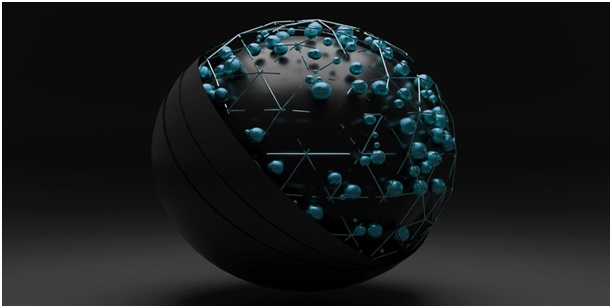
- 20 Nov 2023
Why is it in the News?
Researchers have found "compelling evidence" supporting the existence of the uncommon nitrogen-9 isotope. This discovery challenges previous interpretations and provides a fresh perspective on subatomic structures.
About Nitrogen-9 Nucleus:
- Nitrogen-9 is a radioactive isotope of nitrogen.
- This means that it is unstable and will eventually decay into a different isotope of nitrogen or a different element.
- It is considered unusual because it has an uncommon combination of seven protons and two neutrons (7:2) in its atomic nucleus.
- This creates an unusually high ratio of protons to neutrons.
- Generally, elements have a balanced ratio for stability, but Nitrogen-9’s high proton content makes it less stable, challenging the conventional stability thresholds.
- This oddity raises questions about its existence in this state and how it maintains stability, introducing complexity to our understanding of atomic nuclei.
- The reason for nitrogen-9's short half-life is that the strong force, which is responsible for holding nuclei together, is not strong enough to overcome the Coulomb repulsion between the positively charged protons in the nitrogen-9 nucleus.
- The discovery of nitrogen-9 is a major breakthrough in our understanding of nuclear physics.
- It showed that nuclei with very high proton-to-neutron ratios can exist, even if they are only for a very short time.
- This discovery has led to new research into the limits of nuclear stability and the role of nucleons (protons and neutrons) in holding nuclei together.
What is an Isotope?
- An isotope is a variant of a chemical element that has the same number of protons but a different number of neutrons in its atomic nucleus.
- This variance in neutron count results in different atomic masses for isotopes of the same element.
- Isotopes of an element share similar chemical properties but may exhibit differences in physical properties, such as stability and radioactivity.
Onattukara Sesame (The Hindu)
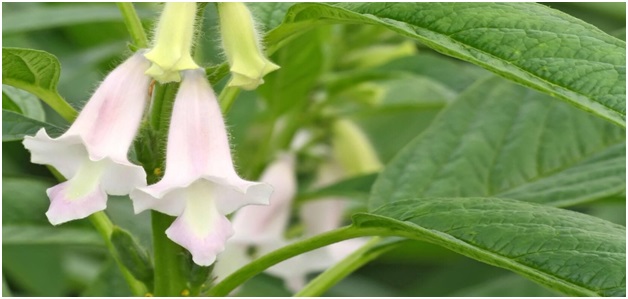
- 20 Nov 2023
Why is it in the News?
Efforts are being made to expand the cultivation of geographical indication (GI)-tagged Onattukara sesame.
About Onattukara Sesame:
- Onattukara sesame is a special sesame seed variety native to the Onattukara region of Kerala.
- It is renowned for its distinctive flavor, rich aroma, and exceptional nutritional and health value.
- In 2023, it received a geographical indication (GI) tag, recognizing its unique characteristics and link to the Onattukara region.
- This recognition serves as a testament to the exceptional qualities of Onattukara sesame and is expected to propel its demand and further empower the farmers of the region.
- Onattukara sesame distinguishes itself from other sesame varieties through its unique flavor profile.
- This distinctive flavor profile makes Onattukara sesame an indispensable ingredient in traditional Kerala cuisine, where it graces a variety of dishes, from curries and chutneys to sweet snacks.
- Distinguishing Features:
- Flavor and Aroma: Onattukara sesame has a nutty, slightly sweet flavor and a rich, earthy aroma.
- Nutritional Value: It is a rich source of vitamins and minerals, including vitamin E, calcium, magnesium, and iron.
- It also contains healthy fats, such as omega-3 and omega-6 fatty acids.
- Medicinal Properties: Traditionally, Onattukara sesame oil has been used in Ayurveda for its medicinal properties, including its ability to promote skin health, reduce inflammation, and relieve joint pain.
Freemartins (The Hindu)
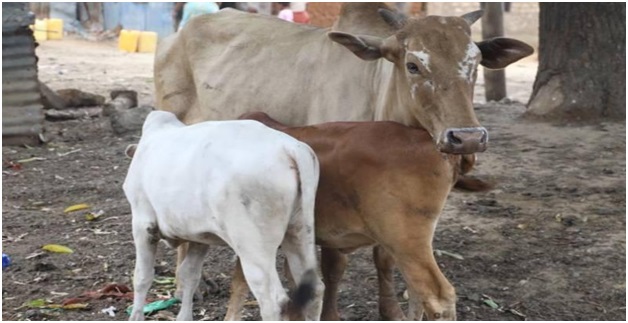
- 20 Nov 2023
Why is it in the News?
Farmers in agricultural settings often identify freemartins by observing their physical and/or behavioral traits since these animals are unable to reproduce.
About Freemartins:
- A freemartin is an infertile female cattle with masculinized behavior and non-functioning ovaries.
- This condition is caused by the exchange of cells between female and male twins in utero.
- The male twin produces a hormone called anti-Müllerian hormone (AMH), which suppresses the development of the female reproductive tract.
- As a result, the female twin is born with an underdeveloped reproductive system and is unable to reproduce.
- Freemartinism occurs in about 90% of female cattle twins that share a placenta with a male twin.
- This is because the placentas of cattle twins are often fused together, allowing cells to move between the two fetuses.
- The fusion of placentas usually occurs between 40 and 120 days of gestation.
- In addition to being infertile, freemartins may also exhibit some masculine characteristics, such as a deeper voice, coarser hair, and a more muscular build.
- This is because they have been exposed to AMH from their male twin.
- There is no treatment for freemartinism, as the animal is infertile and cannot produce offspring.
- However, freemartins can still be used for other purposes, such as meat production or draft work.
Sophisticated Analytical & Technical Help Institutes (SATHI) Initiative (The Hindu)
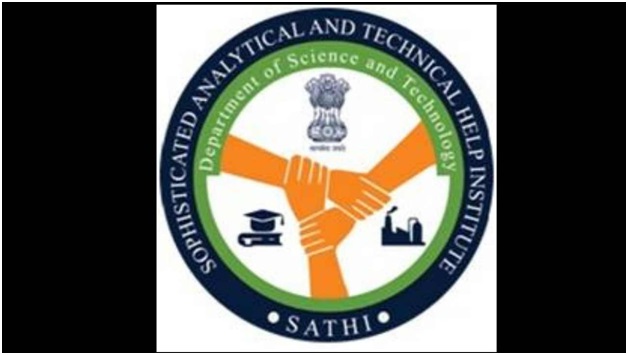
- 20 Nov 2023
Why is it in the News?
The cancellation of a call for proposals under the Department of Science and Technology's SATHI program by the Centre has raised concerns among higher education institutions.
About Sophisticated Analytical & Technical Help Institutes (SATHI) initiative:
- The Department of Science and Technology (DST) is starting a project to create a shared Science and Technology infrastructure facility called Sophisticated Analytical & Technical Help Institute (SATHI).
- This facility will be available for use by academic institutions, startups, manufacturing units, industries, and R&D labs.
- The goal is to offer efficiently managed services with high transparency, accessibility, and effectiveness all in one place, catering to the needs of industries, startups, and academia.
- In the first phase, SATHI facilities will be set up at IIT-Delhi, IIT-Kharagpur, and BHU-Varanasi.
- This initiative aims to benefit less-endowed organizations like MSMEs, startups, state universities, and colleges, fostering a strong culture of research collaboration across different institutions and disciplines.
Aims & Objectives of SATHI:
- Provide shared, professionally managed Science and Technology services and infrastructure.
- Ensure efficiency, accessibility, and transparency for the demands of faculty, researchers, scientists, and students from various institutes and organizations.
- Enable round-the-clock R&D activities with minimal downtime.
- Offer facilities for fabrication work, rapid prototyping, material testing, characterisation, device fabrication, smart manufacturing, and more.
- Attract and support R&D labs, industrial R&D, MSMEs, Incubators, Start-ups, etc.
- Organize short-term courses, workshops, seminars, and hands-on training programs on the use and application of various instruments and techniques.
- Provide technical help and scientific knowledge to both external and internal users/researchers.
- Train technicians for maintaining and operating sophisticated scientific instruments.
- Maintain a record of trained personnel for better societal outreach and utilization of trained manpower across different SATHI centers when needed.
State of the Cryosphere Report 2023 (DownToEarth)
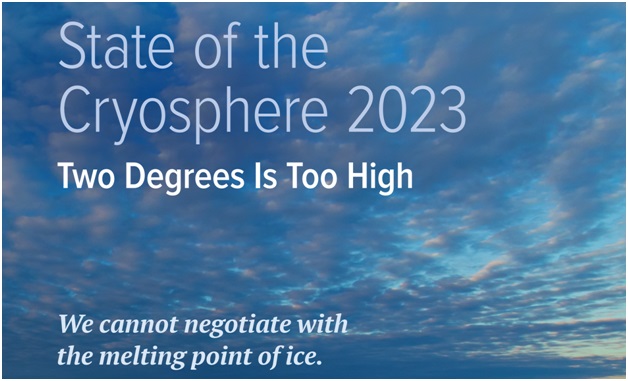
- 18 Nov 2023
Why in the News?
As per the 2023 State of the Cryosphere report, the anticipated disappearance of almost all tropical glaciers, a significant majority of mid-latitude glaciers, and polar regions is expected, even if global efforts successfully limit the rise in temperatures to 2 degrees Celsius above preindustrial levels.
About the State of the Cryosphere Report 2023:
- The State of the Cryosphere Report annually assesses the condition of Earth's snow and ice regions, and has been reviewed and endorsed by over 60 leading cryosphere scientists.
- This report is published by The International Cryosphere Climate Initiative (ICCI.)
- The cryosphere is a term for the regions of our globe that are covered in ice and snow – either seasonally or year-round.
- The Report describes how a combination of melting polar ice sheets, vanishing glaciers, and thawing permafrost will have rapid, irreversible, and disastrous impacts worldwide.
Key findings in the report on the impact of 2°C of warming include:
- Ice sheets: nearly all of Greenland, much of West Antarctica, and even vulnerable portions of East Antarctica will be triggered to very long-term, inexorable sea-level rise.
- Glaciers: extensive, irreversible ice loss from the world’s glaciers in many major river basins, with some disappearing entirely.
- As glaciers melt, risks of catastrophic events such as landslides, sudden ice shears, and glacial lake outburst floods increase.
- Sea ice: extensive sea ice loss at both poles, with severe feedback to global weather and climate.
- By 2°C, the Arctic Ocean will be sea ice-free in summer every year, potentially for several months.
- Permafrost: extensive permafrost thaw and resulting greenhouse gas emissions will cause temperatures to continue to rise, even once human emissions reach zero.
- At 2°C, annual total permafrost emissions (both CO2 and methane) would total the size of the entire European Union’s emissions from 2019.
- Polar ocean acidification: year-round, permanent corrosive ocean acidification conditions in many regions of Earth’s polar and near-polar seas.
- Shell-building animals and commercial fisheries that rely on them in the food chain may not survive.
About International Cryosphere Climate Initiative (ICCI):
- It was formed in 2009 following COP-15 in Copenhagen
- ICCI is a network of senior policy experts and researchers working with governments and organizations to create, shape, and implement initiatives designed to preserve as much of the Earth’s cryosphere as possible.
- ICCI programs target the unique climate dynamics at work in the cryosphere, while at the same time lending increased urgency to global climate efforts aimed at CO2 and other greenhouse gases by communicating the unexpected rapidity and global implications of cryosphere warming.
Dwarf Planet Eris (The Hindu)
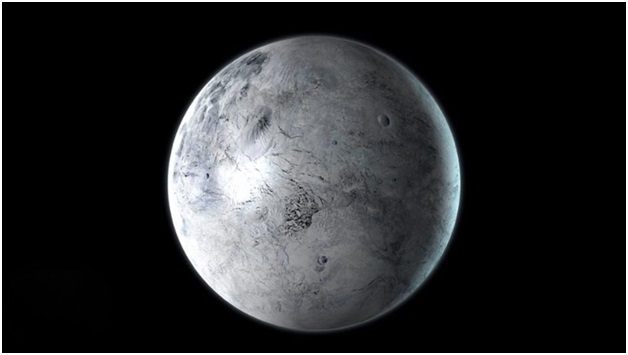
- 18 Nov 2023
Why in the News?
Recently, scientists have discovered the inside structure of the enigmatic dwarf planet Eris.
About Dwarf Planet Eris:
- This new dwarf planet is the largest object found in orbit around the sun since the discovery of Neptune and its moon Triton in 1846.
- It was discovered on Jan. 5, 2005, and It is larger than Pluto, discovered in 1930.
- Like Pluto, the new dwarf planet is a member of the Kuiper belt, a swarm of icy bodies beyond Neptune in orbit around the sun.
- Eris is named for the ancient Greek goddess of discord and strife.
- The surface of Eris is extremely cold, so it seems unlikely that life could exist there.
- With a radius of about 1,163 kilometers, Eris is about 1/5 the radius of Earth.
- Eris, like Pluto, is a little smaller than Earth's Moon.
- Eris takes 557 Earth years to make one trip around the Sun.
- As Eris orbits the Sun, it completes one rotation every 25.9 hours, making its day length similar to ours.
- Moons: Eris has a very small moon called Dysnomia.
- Dysnomia has a nearly circular orbit lasting about 16 days.
- Eris most likely has a rocky surface similar to Pluto.
- Atmosphere: The dwarf planet is often so far from the Sun that its atmosphere collapses and freezes, falling to the surface as snow.
- As it gets closest to the Sun in its faraway orbit, the atmosphere thaws.
Card-on-File Tokenisation (CoFT) (Business Standard)

- 18 Nov 2023
Why in the News?
Recently, Visa has highlighted that the primary advantage of tokenization is a decreased risk of data breaches.
What is Card-on-File Tokenisation?
- Tokenisation is a process where the cardholder’s original card number, one which is written on the card and is extensively used for transactions and card identification, is replaced with a surrogate term called ‘token.’
- This process allows enhanced card protection by converting the customers’ card numbers into tokens.
- The exchange of tokens happens between the token requestor and the network, which empowers customers to receive a secure and reliable online payment experience.
- All relationship evidence of such exchange between token and crucial card information is securely saved in a vault that is only accessible to the card networks.
- Resultantly, the customers’ card details will be highly protected from online fraud and hackers.
How Does Card-on-File Tokenisation Work?
- When a customer makes a transaction by using their card at a tokenisation-based-authentication server:
- A credit/debit card is used for transactions at a POS device or an e-commerce website
- The tokenisation system receives and interprets the credit card number
- The tokenisation system goes on to replace the original credit card number with a 16-digit random character token for security
- The tokenisation system then provides the converted 16-digit random token number to the e-commerce marketplace and replaces the user’s credit card number with the same in their system
- For instance, card number (example): 4018 2255 6984 7854 will be replaced with token number: 4325 5214 8574 6658.
- The tokenisation system is an important tool for separating crucial data in ecosystems and databases while also offering enhanced card protection to cardholders.
Measles (Indian Express)
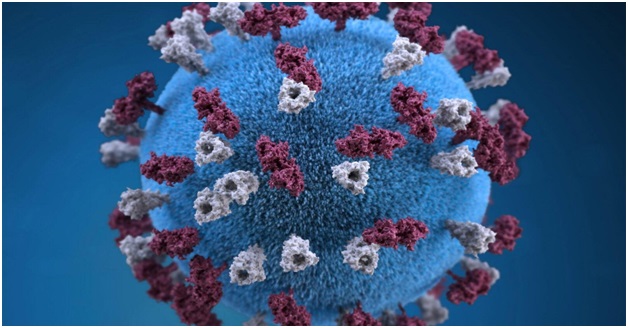
- 18 Nov 2023
Why in the News?
An estimated 11 lakh children in India missed their crucial first dose of measles vaccine in 2022, according to a report by the World Health Organization and US Centres for Disease Control and Prevention (CDC).
What is Measles?
- Measles is a highly contagious disease caused by a virus.
- It is caused by the Morbillivirus of the Paramyxoviridae family.
- It spreads easily when an infected person breathes, coughs, or sneezes.
- It can cause severe disease, complications, and even death.
- Measles can affect anyone but is most common in children.
- Measles infects the respiratory tract and then spreads throughout the body.
- Symptoms: Symptoms include a high fever, cough, runny nose, and a rash all over the body.
- Measles typically starts with a strong fever about 10 to 14 days after getting infected.
- In the beginning, it starts with a runny nose, cough, red and watery eyes, and small white spots inside the cheeks.
- After a few days, a rash appears, usually on the face and upper neck.
- This rash spreads over about three days, reaching the hands and feet, and lasts for five to six days before fading away.
- Any non-immune person (not vaccinated or vaccinated but not developed immunity) can become infected.
- If a woman catches measles during pregnancy, this can be dangerous for the mother and can result in her baby being born prematurely with a low birth weight.
- Treatment: There is no specific treatment for measles.
Amazon Yellow Spotted River Turtle (The Hindu)
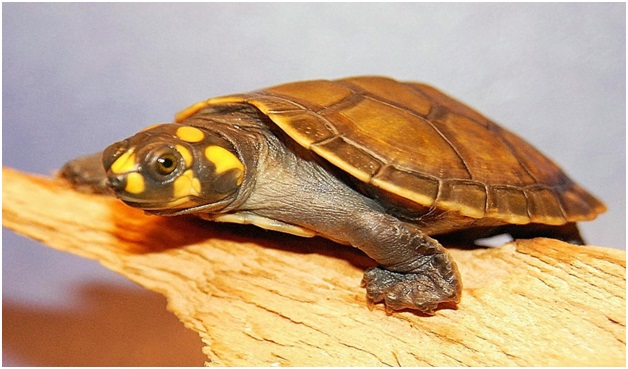
- 18 Nov 2023
Why in the News?
In the Peruvian Amazon, an extended heat wave and drought have shortened the incubation period for thousands of turtle hatchlings released into the river by biologists as part of a local environmental program.
About Amazon Yellow Spotted River Turtle:
- This species is one of the largest South American river turtles.
- It is characterized by its dark upper shell and yellow spots on the head, which fade with age.
- They are considered side-necked turtles because they cannot pull their heads into their shells.
Native Habitat:
- Yellow-spotted River turtles are native to the Amazon River basin and can be found in the Amazon and Orinoco river systems in Venezuela, eastern Colombia, eastern Ecuador, northeastern Peru, the Guianas, Brazil and northern Bolivia.
- These turtles spend time basking along the riverbanks and in the calm waters of big rivers and streams.
- They avoid fast-moving waters.
Food/Eating Habits:
- They are omnivorous, feeding on both vegetation and small animals.
Reproduction and Development:
- Females lay their eggs in the peak of the dry season and the nests are sometimes destroyed by rising flood waters.
Sleep Habits:
- The turtles are diurnal, meaning they are most active in mid-morning and afternoon.
Lifespan:
- The oldest known yellow-spotted Amazon River turtle living in human care reached 23 years of age.
- They can live up to 70 years.
Exercise MITRA SHAKTI (PIB)
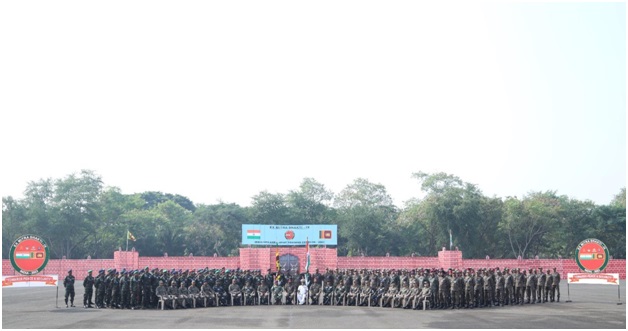
- 17 Nov 2023
Why in the News?
A joint military exercise, “Exercise MITRA SHAKTI-2023” is being conducted from November 16th to 29th, 2023, in Aundh (Pune).
About Exercise MITRA SHAKTI:
- Exercise MITRA SHAKTI is the ninth edition of a joint military exercise between the Indian and Sri Lankan armies.
- The Indian contingent, consisting of 120 personnel mainly from the MARATHA LIGHT INFANTRY Regiment, is participating alongside personnel from the Indian Air Force and the Sri Lankan Air Force.
- This exercise is the first bilateral and bi-service endeavor between the two countries.
- The primary goal is to jointly practice sub-conventional operations under Chapter VII of the United Nations Charter, emphasizing coordinated responses in counter-terrorism operations.
- The exercise includes training in Army Martial Arts Routine (AMAR), combat reflex shooting, Yoga, and the use of Drones and Counter Unmanned Aerial Systems, along with helicopters.
- Joint drills will cover securing helipads and conducting casualty evacuation during counter-terrorist operations.
- The collective focus is on enhancing interoperability among troops, minimizing risks to life and property, and prioritizing the interests and agenda of the UN in peacekeeping operations.
- Additionally, the exercise aims to strengthen bilateral relations between the neighboring nations.
Sickle Cell Disease (TOI)
- 17 Nov 2023
Why in the News?
The UK's medicines regulator has granted approval for the world's first gene therapy treatment for sickle cell disease.
What is Sickle Cell Disease?
- Sickle cell disease (SCD) is a blood disorder that is passed through the genes and results in abnormal hemoglobin.
- (Hemoglobin is a part of the red blood cells that carry oxygen through the body.)
- People with SCD have red blood cells that sickle or change shape when exposed to low oxygen levels in the cell.
- These sickled cells also become stiff and sticky compared to normal red blood cells.
- They can block blood flow, leading to tissue damage and pain.
- Over time, these blockages can lead to organ dysfunction and result in other serious medical complications.
Sickle Cell Disease Types
- There are several different forms of sickle cell disease, and it is different for each person.
- Hemoglobin SS, also known as sickle cell anemia
- Hemoglobin SC disease
- Hemoglobin sickle beta-thalassemia
- The most common and usually the most severe form is sickle cell anemia.
- The SCD type affects the severity and frequency of complications.
- The type of SCD also impacts the timing of complications.
- Some people have symptoms at a very young age while others will not show symptoms until adulthood.
Sickle Cell Disease Symptoms
- Anemia: Sickled blood cells are less able to carry oxygen, leading to anemia.
- Symptoms can include fatigue, weakness, dizziness, headache, shortness of breath and chest pain.
- Bone Pain: Decreased blood flow to the bones leads to periodic spikes in bone pain known as bone crises.
- SCD can also cause avascular necrosis, which is a breakdown of the bone and joint.
- Eye Disease or Blindness: Sickled blood cells can damage the fragile blood vessels in the back of the eye, leading to retina damage called retinopathy. This can lead to blindness.
- Infections: The spleen fails in SCD patients at a young age, decreasing the body’s ability to fight infections.
- Kidney Issues: Blood in the urine (papillary necrosis), frequent urination, kidney disease.
Treatments:
- A bone marrow transplant (stem cell transplant) can cure sickle cell disease.
- However, there are treatments that can help relieve symptoms, lessen complications, and prolong life.
- Gene therapy is also being explored as another potential cure. The UK recently became the first country to approve gene therapy treatment for sickle cell disease
Indian Computer Emergency Response Team (CERT-In) (Business Standard)
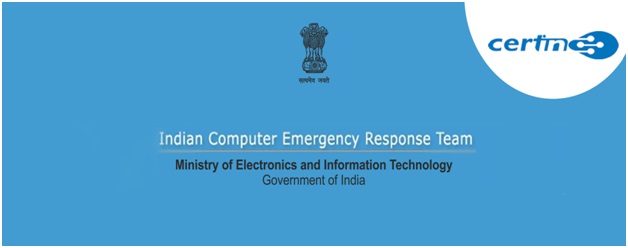
- 17 Nov 2023
Why in the News?
Among 1.39 million cyber security cases last year, vulnerable services made up 875,892 of the total incidents tackled by Cert-In
What is CERT-In?
- CERT-In stands for the Indian Computer Emergency Response Team.
- It is a government agency that functions under the Ministry of Electronics and Information Technology (MeitY).
- It was established in January 2004 with the objective of securing Indian cyberspace.
- It is the national nodal agency for dealing with cyber security threats like hacking and phishing.
- It strengthens the security-related defence of the Indian Internet domain.
- The Information Technology Act of 2000 designated CERT-In to serve as the national agency to perform the following functions in the area of cyber security:
- Prevention of cyber attacks: CERT-In works to prevent cyber attacks by issuing advisories and guidelines to organizations and users.
- It also conducts vulnerability assessments and penetration testing to identify and remediate security weaknesses.
- Incident response: It provides technical assistance to organizations that have been affected by cyber-attacks.
- It helps them to contain and recover from the incident, and to minimize the damage.
- Cyber security awareness: It raises cyber security awareness among the Indian public through various initiatives, such as workshops, seminars, and online resources.
- Coordination with other agencies: CERT-In coordinates with other cyber security agencies in India and around the world to share information and best practices.
- The constituency of CERT-In is the Indian cyber community and Indian cyberspace.
- CERT-In provides services to organisations in the Government, Public, and Private sectors.
- In addition, CERT-In provides services to individuals and home users as well.
- Disclosure of information will be followed in accordance with Indian Constitutional laws.
Worldwide Governance Indicators (Indian Express)
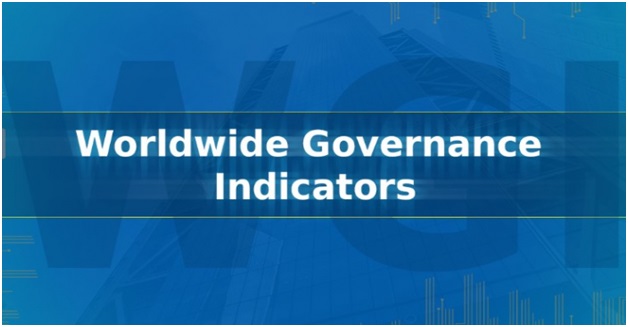
- 17 Nov 2023
Why in the News?
The Indian Chief Economic Adviser recently expressed worry about credit rating agencies using the World Bank's Worldwide Governance Indicators to assess ratings, particularly for developing countries.
About Worldwide Governance Indicators:
- The Worldwide Governance Indicators is based on a long-standing research programme of The World Bank.
- It was first established in 1996 to measure the quality of governance in over 200 countries.
- These aggregate indicators are derived from over 30 individual data sources produced by a variety of survey institutes, think tanks, non-governmental organizations, international organizations, and private sector firms.
- The indicators capture six key dimensions of governance including:
- Voice and Accountability
- Political Stability and Absence of Violence
- Government Effectiveness
- Regulatory Quality
- Rule of Law
- Control of Corruption
- According to The World Bank, corruption is the single greatest obstacle to economic and social development.
About The World Bank:
- The World Bank is an international financial institution that provides financial and technical assistance to developing countries around the world.
- Its goals are to reduce poverty and support development.
- It helps by offering a growing range of free tools, research, and knowledge to help people address the world’s development challenges, for instance, comprehensive, downloadable indicators about development in countries around the globe.
Wasp-107b (TOI)

- 17 Nov 2023
Why in the News?
In its latest discovery, NASA's James Webb Space Telescope has discovered a planet "Wasp-107b" where specks of sand fall as rain.
What is “Wasp-107b”?
- WASP-107b is a warm exoplanet with Neptune’s mass and Jupiter’s radius.
- This makes it ‘fluffy’ compared to the giant gas planets in our Solar System.
- This unusual size-to-mass ratio has given astronomers a unique opportunity to probe its atmosphere roughly 50 times deeper than more dense planets like Jupiter.
- This gas giant, often referred to as a "super-Neptune," holds several remarkable characteristics that set it apart from other known exoplanets.
Key Characteristics of WASP-107b:
- Size and Mass: WASP-107b is roughly the size of Jupiter, but with only about 12% of Jupiter's mass.
- This makes it one of the least dense exoplanets ever discovered.
- Orbit and Proximity: WASP-107b orbits its host star, WASP-107, very closely, completing an orbit in just 5.7 days.
- It is located about 200 light-years from Earth in the constellation Virgo.
- Sand Rain: WASP-107b exhibits a unique water cycle similar to Earth's, but with a peculiar twist: instead of water droplets, the planet experiences sand rain.
- These sand grains, composed of silicates, rise from lower atmospheric levels and condense into clouds before falling back down.
- Atmosphere: WASP-107b possesses a puffy atmosphere, likely due to its low density.
- In 2018, scientists using the Hubble Space Telescope detected helium in its atmosphere, marking the first detection of this element in an exoplanet's atmosphere.
- Potential for Atmospheric Characterization: WASP-107b's large size and proximity to its star make it a promising target for future atmospheric characterization studies.
- Scientists hope to glean more insights into the composition and dynamics of its atmosphere.
Pradhan Mantri Kisan Samman Nidhi (PM-KISAN) Scheme (TOI)
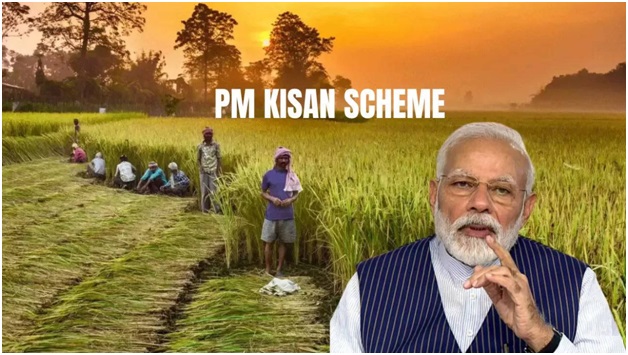
- 16 Nov 2023
Why in the News?
Prime Minister Narendra Modi released the 15th installment of the Pradhan Mantri Kisan Samman Nidhi (PM-Kisan) scheme worth over Rs 18,000 crore to more than 8 crore farmers on November 15, 2023.
About Pradhan Mantri Kisan Samman Nidhi (PM-KISAN):
- The Pradhan Mantri Kisan Samman Nidhi (PM-KISAN) is a Central Sector scheme with 100% funding from the Government of India.
- Under the scheme, income support of Rs. 6,000 per year in three equal installments is provided to all land-holding farmer families, providing them with socio-economic security.
- The amount is directly transferred to the bank accounts of the beneficiaries without any involvement of intermediaries, making it one of the largest Direct Benefit Transfer (DBT) schemes in the world.
- So far, more than Rs. 2.42 lakh crore have been disbursed to over 11 crore farmers.
- As per the study by the International Food Policy Research Institute (IFPRI), PM-KISAN had numerous benefits for the farmers and agriculture sector.
- It addresses the liquidity constraints of farming households, enabling essential input procurement.
- The scheme boosts modern cultivar adoption through Krishi Vigyan Kendras.
- The cash transfer to farmers increases their total net income and enhances their risk-taking capacity, leading to productive investments.
- PM-KISAN has empowered the farmers by boosting agriculture investments, easing credit constraints, and spurring rural economic growth.
- Consequently, farmers have been able to invest in their farms, including purchasing seeds, fertilizers, and necessary equipment, leading to increased agricultural production and improved crop yields.
Voice of Global South Summit (NewsOnAir)
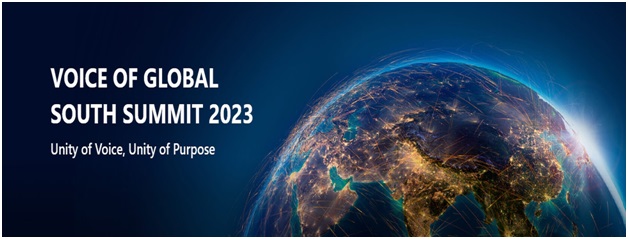
- 16 Nov 2023
Why in the News?
Prime Minister Narendra Modi will inaugurate the second Voice of Global South Summit on November 17. This will be the second Voice of Global South Summit in less than a year hosted by India.
About ‘Voice of Global South Summit’ 2023:
- India is hosting the ‘Voice of Global South Summit’ 2023 in virtual format.
- The theme of the inaugural Leaders’ Session is "Together, for Everyone’s Growth, with Everyone’s Trust” and that of the Concluding Leaders’ Session is "Global South: Together for One Future”.
- The Summit will focus on sharing with the countries of the Global South, the key outcomes achieved in various G20 meetings over the course of India’s Presidency.
- The Summit will serve as a platform to discuss ways to sustain the momentum generated toward the common aspiration of a more inclusive, representative, and progressive world order.
What is the Voice of Global South Summit?
- Voice of Global South Summit has been India's endeavor to provide a common platform to deliberate on the concerns, interests, and priorities that affect the developing countries and also to exchange ideas and solutions, and most importantly, to unite in voice and purpose in addressing the concerns and priorities.
- The initiative is inspired by Prime Minister Narendra Modi’s vision of Sabka Saath, Sabka Vikas, Sabka Vishwas, and Sabka Prayaas, and is underpinned by India’s philosophy of “Vasudhaiva Kutumbakam”.
- India will work to ensure that the valuable inputs generated from partner countries in the Voice of Global South Summit deliberations receive due cognizance globally.
What is Global South?
- he term ‘Global South’ began by loosely referring to those countries that were left out of the industrialization era.
- These countries had a conflict of ideology with the capitalist and communist countries, accentuated by the Cold War.
- It includes countries that are in Asia, Africa, and South America.
- ‘Global South’ is just the opposite of ‘Global North’, defined essentially by an economic division between the rich and poorer countries.
Viksit Bharat Sankalp Yatra (The Hindu)
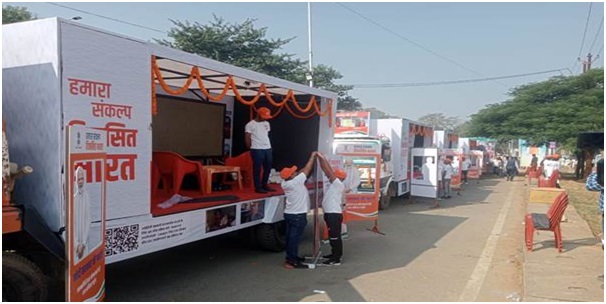
- 16 Nov 2023
Why in the News?
Prime Minister Narendra Modi launched the programme "Viksit Bharat Sankalp Yatra" across the country on November 15 to promote the Centre’s welfare schemes.
On the occasion of the Janjatiya Gaurav Divas (15th Nov), marking the birth anniversary of tribal icon Birsa Munda, Prime Minister Narendra Modi flagged off the Viksit Bharat Sankalp Yatra from Khunti, Jharkhand.
About Viksit Bharat Sankalp Yatra:
- The central idea of Viksit Bharat Sankalp Yatra is to publicise schemes, to get data on those who have benefitted from these schemes, and to mark those who are eligible but haven't got the schemes yet.
- It aims to cover over 2.55 lakh Gram Panchayats and over 3,600 urban local bodies by January 25, 2024, touching every district of the country.
- Its focus will be on reaching out to people and creating awareness about the benefits of welfare schemes like sanitation facilities, essential financial services, electricity connections, access to LPG cylinders, housing for the poor, food security, proper nutrition, reliable healthcare, clean drinking water, etc.
- Five specially designed IEC (Information, Education, and Communication) Vans has been flagged off marking the launch of the massive outreach programme of the government.
- The IEC Vans have been branded and customised to enable dissemination of information through audio visuals, brochures, pamphlets, booklets, and flagship standees in Hindi and state languages showcasing the major schemes, highlights and their achievements at the national, state and district level.
- The schemes being publicised include Ayushman Bharat, PMJAY, PM Garib Kalyan Anna Yojana, Deendayal Antyodaya Yojana - National Rural Livelihoods Mission, PM Awas Yojana (Rural), PM Ujjwala Yojana, PM Vishwakarma, PM Kisan Saman, Kisan Credit Card (KCC), PM Poshan Abhiyan, Har Ghar Jal - Jal Jeevan Mission, Survey of villages and mapping with improvised technology in village areas (SVAMITVA), Jan Dhan Yojana, Jeevan Jyoti Bima Yojana, Suraksha Bima Yojana, Atal Pension Yojana, PM PRANAM, Nano Fertiliser.
- Since schemes are aimed at tribals, specific concerns of tribal areas such as the Sickle Cell Anaemia Elimination Mission, Enrolment in Eklavya Model Residential Schools, Scholarship Schemes, Forest Right Titles, Individual and Community Land, Van Dhan Vikas Kendra, Organising Self Help Groups are also being addressed.
- The officers in charge will make sure that they reach out to the tribals and give out information about schemes meant for them.
India International Science Festival (PIB)
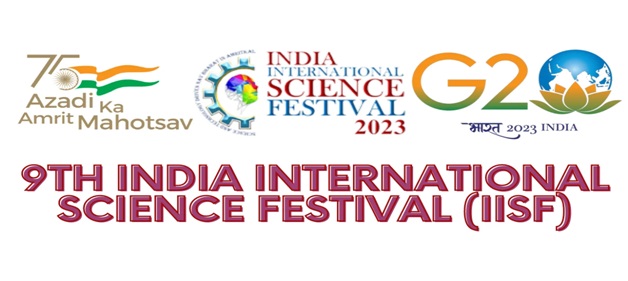
- 16 Nov 2023
Why in the News?
The 9th edition of the India International Science Festival (IISF) 2023 will be held at Faridabad, Haryana from January 17th-20th, 2024.
About the India International Science Festival (IISF):
- The India International Science Festival (IISF) is an annual science festival organized by the Ministry of Science and Technology, the Ministry of Earth Science, and Vijnana Bharati in India.
- The festival aims to promote science and technology in India and to showcase the latest advancements in these fields.
- The IISF has been held every year since 2007.
- The festival typically lasts for four days and features a variety of events, including exhibitions, seminars, workshops, and competitions.
- The exhibitions feature displays of scientific and technological innovations from India and around the world.
- The seminars and workshops provide opportunities for scientists and technologists to share their knowledge with the public.
- The competitions encourage students to participate in science and technology.
- The IISF is a major event in the Indian scientific community and has been praised for its role in promoting science education and public awareness of science.
- The festival has also been successful in attracting international participation, with scientists and technologists from around the world attending the event.
- The 2022 IISF was held in Bhopal, Madhya Pradesh, from January 21 to 24.
India International Science Festival (IISF) 2023:
- It will be held at the Campus of Translational Health Science and Technology Institute (THSTI) and Regional Centre for Biotechnology (RCB) of the Department of Biotechnology in Faridabad.
- Theme: 'Science and Technology Public Outreach in Amrit Kaal'.
- IISF 2023 will have a total of 17 themes to showcase scientific achievements, offering diverse benefits to participants and the general public.
Indo-Pacific Economic Framework (IPEF) (Indian Express)
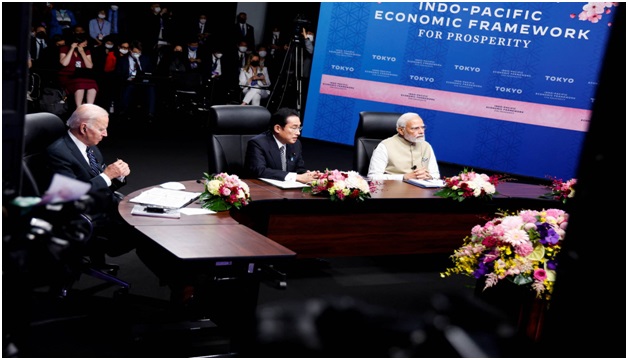
- 16 Nov 2023
Why in the News?
India, the US, and 12 other members of the Indo-Pacific Economic Framework (IPEF) on Wednesday entered into a supply chain resilience agreement that aims to cut dependence on China and help shift manufacturing of crucial goods to member nations.
About Indo-Pacific Economic Framework for Prosperity (IPEF):
- The Indo-Pacific Economic Framework (IPEF) is an economic initiative launched by U.S. President Joe Biden in Tokyo on May 23, 2022.
- The framework aims to strengthen economic cooperation among countries in the Indo-Pacific region, which is home to over 40% of the world's population and generates nearly 60% of global GDP.
- Except Cambodia, Laos, and Myanmar, other Southeast Asian nations are a part of the IPEF.
- It has currently 14 members including Australia, Brunei Darussalam, Fiji, India, Indonesia, Japan, the Republic of Korea, Malaysia, New Zealand, Philippines, Singapore, Thailand, the United States, and Vietnam.
- The IPEF has four pillars:
- Trade;
- supply chains;
- clean energy, decarbonisation and infrastructure;
- tax and anti-corruption.
- IPEF Significance: The IPEF is a significant development in the Indo-Pacific region.
- It is the first major economic initiative launched by the United States in the region since the Trans-Pacific Partnership (TPP) negotiations collapsed in 2017.
- The IPEF is also unique in that it is open to all countries in the Indo-Pacific region, regardless of their economic development level.
- India and IPEF: India has been actively involved in the Indo-Pacific Economic Framework (IPEF) since its launch in May 2022.
- The country has joined three of the four pillars of the framework: supply chains, clean energy, and fair economy.
- However, India has not yet joined the trade pillar, which is the most sensitive and contentious pillar of the framework.
- There are a number of reasons why India has been hesitant to join the trade pillar.
- One concern is that the pillar could lead to tariff cuts on agricultural products, which would harm Indian farmers.
- India is also concerned about the potential for the trade pillar to lead to increased data flows, which could raise privacy concerns.
Tadoba-Andhari Tiger Reserve (TOI)
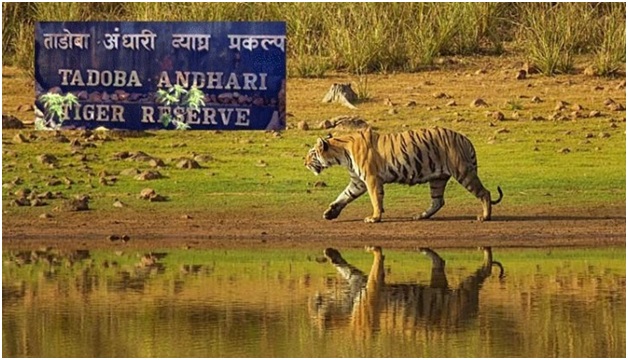
- 15 Nov 2023
Why in the News?
A dominant tiger named Bajrang said to have sired at least 50 cubs during his lifetime, recently died in a territorial fight with another powerful tiger, Chhota Matka, in the Tadoba-Andhari Tiger Reserve (TATR).
About Tadoba Andhari Tiger Reserve:
- Tadoba Andhari Tiger Reserve is the oldest and largest National Park in the Chandrapur district of Maharashtra.
- It is one of India's 47 project tiger reserves existing in India.
- The total area of the tiger reserve is 1,727 Sq.km, which includes the Tadoba National Park, created in the year 1955.
- The Andhari Wildlife Sanctuary was formed in the year 1986 and was amalgamated with the park in 1995 to establish the present Tadoba Andheri Tiger Reserve.
- The word 'Tadoba' is derived from the name of God "Tadoba" or "Taru," which is praised by local tribal people of this region, and "Andhari" is derived from the name of the Andhari river that flows in this area.
- Tadoba is presently home to more than 115 tigers, which is one of the highest in India.
- The vegetation of Tadoba forest is of Southern tropical dry deciduous type and is spread on around 626 sq. km.
- Teak is the prominent tree species in the forest.
- The Tadoba Tiger Reserve is rich in flora and fauna
- Flora: Some of the famous and widely seen flora of this park include Teak, Ain, Bija, Bamboo, Black Plum, and many others.
- Fauna: Tigers, Indian leopards, Sloth bears, Gaur, Nilgai, Striped Hyena, Spotted Deer, Barking Deer, Marsh Crocodile, etc.
INS Sumedha (Financial Express)
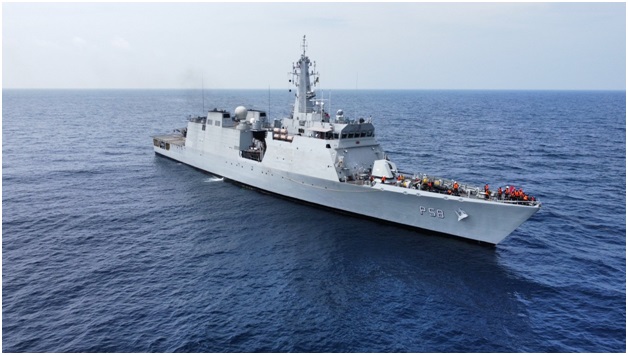
- 15 Nov 2023
Why in the News?
In a strategic move as part of the Indian Navy’s mission-based deployment to West Africa and the Atlantic, INS Sumedha conducted a port call at Walvis Bay, Namibia recently.
About INS Sumedha:
- INS Sumedha is a Saryu-class, Naval Offshore Patrol Vessel (NOPV) of the Indian Navy.
- It is the third ship of the class to be commissioned and was built by Goa Shipyard Limited in India.
- The ship was commissioned in March 2014.
- INS Sumedha is designed to undertake a variety of missions, including fleet support operations, coastal and offshore patrolling, ocean surveillance, and monitoring of sea lines of communication and offshore assets.
- The ship is also capable of carrying out humanitarian assistance and disaster relief (HADR) operations.
- INS Sumedha has been deployed on a number of operational missions, including:
- Operation Kaveri, the evacuation of Indian citizens from Sudan in April 2023.
- The ship has also participated in a number of international exercises, including Exercise Bright Star 2023 in Egypt.
About Walvis Bay:
- Walvis Bay is a city on the coast of Namibia, in the Erongo Region.
- It is the second-largest city in Namibia, after Windhoek, and is the capital of the Erongo Region.
- It is a major port city, and is the main port for Namibia.
- The port is home to a number of shipping companies and is a major export center for Namibian goods, such as fish, minerals, and diamonds.
- Originally a German enclave during the colonial era, Walvis Bay became a vital part of Namibia after gaining independence in 1990.
- The official language of the city is English, but Afrikaans, German, and Portuguese are also spoken.
Asian Development Bank (The Hindu BusinessLine)
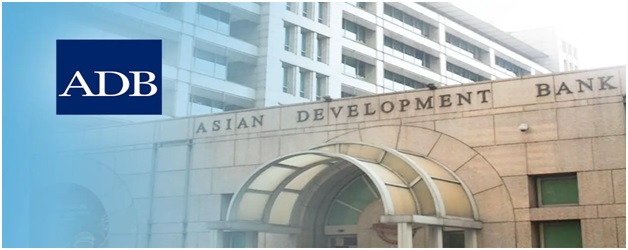
- 15 Nov 2023
Why in the News?
The central government recently signed a USD 400 million policy-based loan with the Manila-based Asian Development Bank (ADB) to support its urban reform agenda to create high-quality urban infrastructure, improve service delivery, and promote efficient governance systems.
About Asian Development Bank (ADB):
- The Asian Development Bank (ADB) is a regional development bank headquartered in Manila, Philippines.
- It was established in 1966 to promote economic development and cooperation in Asia and the Pacific.
- The ADB's primary goal is to reduce poverty in its member countries.
- The bank provides loans, grants, technical assistance, and policy advice to its member countries.
- It also mobilizes private sector investment through its private sector arm, the Asian Development Bank Private Sector Operations.
- It has 68 member countries, including 49 countries in Asia and the Pacific, and 19 non-regional developed countries.
- The ADB's annual lending volume is around $32 billion.
- As of 2022, ADB's five largest shareholders are Japan and the United States (each with 15.6% of total shares), the People's Republic of China (6.4%), India (6.3%), and Australia (5.8%).
- Source of Funding: It relies on member contributions, retained earnings from lending, and the repayment of loans for the funding of the organization.
The bank's strategy is focused on four key areas:
- Promoting sustainable growth: The ADB is committed to supporting its member countries in achieving their sustainable development goals by financing infrastructure, clean energy, and climate change mitigation and adaptation projects.
- Tackling poverty and inequality: The ADB is providing financing for education, health, social protection, and other programs that benefit the poor and vulnerable to reduce poverty and inequality in its member countries.
- Strengthening regional cooperation: The ADB is promoting regional cooperation and integration in Asia and the Pacific.
- The bank is supporting its member countries in developing regional infrastructure, trade, and investment projects.
- Responding to crises and disasters: The ADB is helping its member countries prepare for and respond to crises and disasters by providing finances for disaster risk reduction and resilience projects.
One Station One Product’ scheme (New Indian Express)
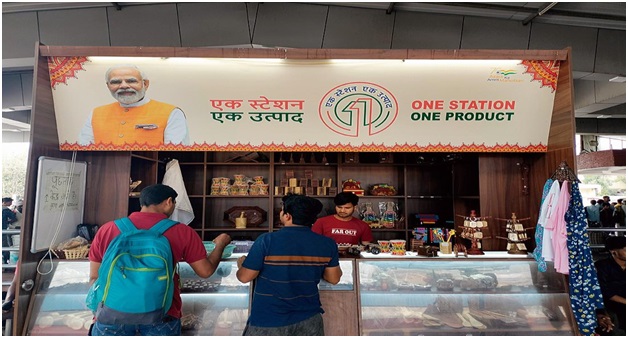
- 15 Nov 2023
Why in the News?
The Indian Railway has established more than a thousand outlets in railway stations across the nation under its ‘One Station One Product’ (OSOP) initiative which aimed at providing a platform for skilled artisans to sell their indigenous products.
About One Station One Product’ (OSOP):
- The OSOP scheme is a unique initiative by the Indian Railways and aims to provide livelihood opportunities through skill development to local artisans, potters, weavers, and craftsmen.
- It was announced in the Union Budget 2022-23.
- The scheme, designed by the National Institute of Design, Ahmedabad, provides distinctive outlets that give high visibility to indigenous products, benefiting local craftsmen.
- Railways allot the outlets at its stations through a tendering process.
- The scheme’s outreach measures include advertising, social media, public announcements, press notifications, and personal visits to artisans.
- The products at these outlets range from artifacts and handicrafts to textiles and traditional appliances, indigenous to the region, and are crafted by local artisans or tribals.
- They also include locally made or grown food products in processed or semi-processed forms.
- It provides uniquely designed sale outlets for locals to sell indigenous products, and is now operational at 1,037 stations nationwide.
PM PVTG Development Mission (NewsOnAir)
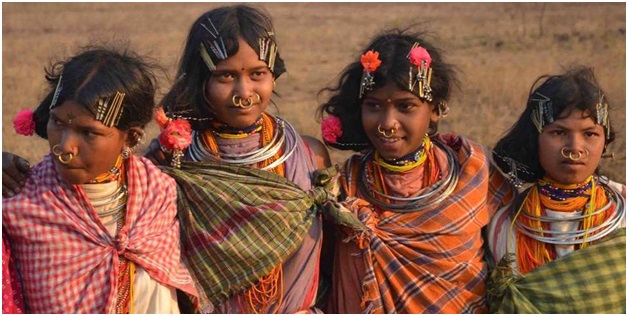
- 14 Nov 2023
Why in the News?
Prime Minister Narendra Modi is going to launch the PM PVTG (Particularly Vulnerable Tribal Groups) Development Mission in a huge step to empower tribal people.
About PM PVTG Development Mission:
- The PM PVTG Development Mission plans to saturate PVTG families and habitations with basic facilities such as road and telecom connectivity, electricity, safe housing, clean drinking water, and sanitation, improved access to education, health and nutrition, and sustainable livelihood opportunities.
- The Mission will be implemented through the convergence of 11 interventions of nine Ministries.
- In addition, saturation will be ensured for schemes such as the Pradhan Mantri Jan Arogya Yojna, Sickle Cell Disease Elimination, TB Elimination, 100 percent immunisation, PM Surakshit Matritva Yojana, PM Matru Vandana Yojana, PM Poshan, and PM Jan Dhan Yojana.
Who are Particularly Vulnerable Tribal Groups (PVTGs)?
- PVTGs, or Particularly Vulnerable Tribal Groups, represent the most vulnerable subsets within India's diverse tribal communities, requiring heightened support and development efforts.
- There are 75 PVTGs in 18 States and Union Territories living in 22 thousand 544 villages having a population of around 28 lakhs.
- These tribes stay in scattered, remote, and inaccessible habitations, often in forest areas.
- The Government of India employs specific criteria for their identification, encompassing pre-agricultural technological levels, low literacy rates, economic disadvantages, and either a declining or stagnant population.
- The origin of the PVTG category dates back to 1975 when the government identified 52 vulnerable tribal groups, later augmented by an additional 23 in 1993.
- Notable examples of PVTGs include:
- the Cholanaikayan in Kerala
- Kathodi in Gujarat
- Jarawas in the Andaman & Nicobar Islands and
- Koraga in Karnataka
- The distinctive classification of PVTGs underscores a commitment to addressing the unique challenges faced by these marginalized tribal communities, aiming to uplift them through targeted support and development initiatives.
Cloud Seeding (LiveMint)
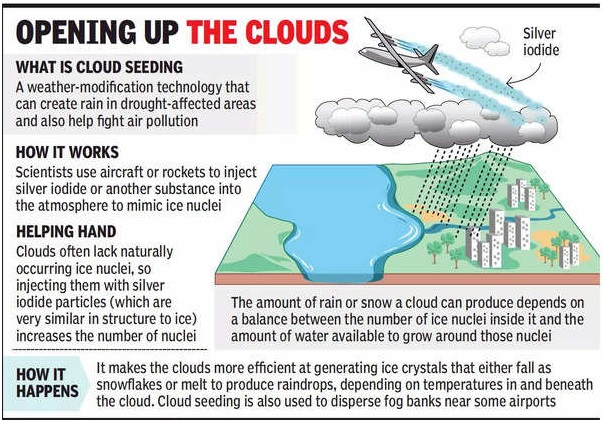
- 14 Nov 2023
Why in the News?
The Delhi government is mulling the use of artificial rain through cloud seeding this month to combat the air pollution crisis in the national capital.
What is Cloud Seeding?
- Cloud seeding is a weather modification technique aimed at increasing precipitation by dispersing substances into the air that serve as cloud condensation or ice nuclei.
- The primary goal is to encourage the formation and growth of precipitation particles within clouds.
- Commonly used substances for cloud seeding include silver iodide, potassium iodide, and liquid propane.
There are two main types of cloud seeding:
- Static cloud seeding: This type of seeding is used to increase precipitation in areas that are experiencing drought
- It involves releasing silver iodide or dry ice into clouds that are already producing precipitation.
- The silver iodide or dry ice acts as ice nuclei, which causes water droplets in the clouds to freeze and form snowflakes.
- The snowflakes then grow larger and fall to the ground as rain or snow.
- Dynamic cloud seeding: This type of seeding is used to increase the amount of precipitation that falls from clouds that are not yet producing precipitation.
- It involves releasing silver iodide into clouds that are still in the development stage.
- The silver iodide acts as condensation nuclei, which causes water vapor in the clouds to condense and form water droplets.
- The water droplets then grow larger and fall to the ground as rain or snow.
- Cloud seeding is typically done using aircraft, but it can also be done using ground-based generators or rockets.
- The aircraft or other seeding platform will fly into the clouds and release the silver iodide or dry ice.
- The seeding material will then spread throughout the cloud and begin to alter the microphysical processes.
- The effectiveness of cloud seeding is debated.
- Some studies have shown that it can increase precipitation by up to 30%, while other studies have shown that it has little or no effect.
- The effectiveness of cloud seeding is likely to vary depending on the type of clouds being seeded, the atmospheric conditions, and the seeding method used.
- Cloud seeding is used in a variety of countries around the world, including the United States, China, Russia, and Australia.
GPS Anklets (Indian Express)
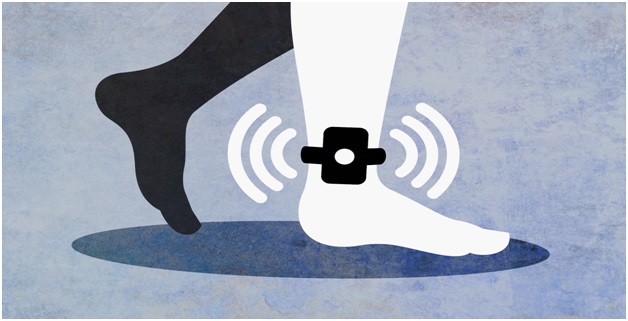
- 14 Nov 2023
Why in the News?
For the first time in India, a prisoner in J&K has been given bail on the condition that his movements are monitored constantly.
About GPS Anklets/Tracker:
- The GPS tracker is a compact wearable gadget secured around the ankle, offering real-time location details.
- It is designed to be tamper-proof, triggering an alarm if any attempt is made to interfere with it.
- Removal by the wearer or any unauthorized individual without causing damage is virtually impossible.
- This versatile tracker can be attached to either the ankle or the arm, presenting as GPS anklets or GPS bracelets.
- While commonplace for bail conditions in countries such as the United States, the United Kingdom, and Malaysia, this marks the inaugural use of GPS trackers for this purpose in India.
What is GPS?
- GPS, or the Global Positioning System, is a satellite-based navigation system with a global reach.
- It functions through a network of satellites orbiting Earth, transmitting signals to GPS receivers.
- This technology has revolutionized navigation, offering precise location and time information for diverse applications, from driving to hiking.
- Originally developed for military purposes, GPS is now widely used in civilian life, integrated into smartphones for location-based services and emergency response.
- Its applications extend to real-time tracking of vehicles and assets, contributing to enhanced security and efficient management.
- Ongoing advancements ensure that GPS remains a crucial tool in modern navigation.
Vadhavan Port (HT)
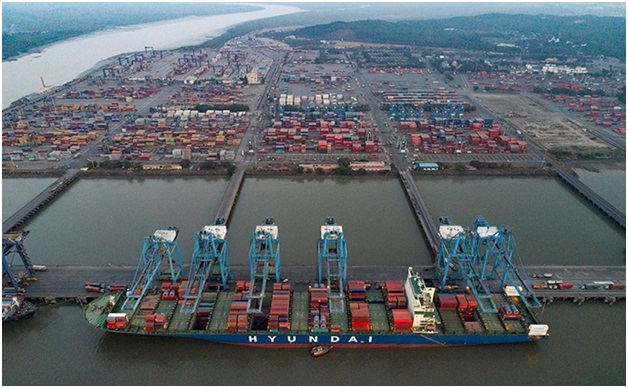
- 14 Nov 2023
Why in the News?
The Vadhavan Port Project Ltd. (VPPL) has started the procedures to build a port with an estimated cost of ?76,220 crore. Public hearings are expected to commence in the coming months.
About Vadhavan Port:
- The Vadhavan Port is a proposed deep-sea port to be located in Palghar District, Maharashtra.
- It is expected to be one of the largest ports in the world, with a capacity to handle over 20 million TEUs (twenty-foot equivalent units) of containers per year.
- The port is being developed by a joint venture between the Jawaharlal Nehru Port Authority (JNPA) and the Maharashtra Maritime Board (MMB).
- The Vadhavan Port is being designed as a "green port" with a focus on sustainability.
- The port will use renewable energy sources and implement energy efficiency measures.
- The port will also have a dedicated waste management system to minimize environmental impact.
- It is expected to be operational by 2040 and is a critical project for India's economic growth and development.
- The Vadhavan Port is expected to be a major boost to the Indian economy.
- It will create thousands of jobs and attract billions of dollars in investment.
- The port will also help to reduce congestion at the JNPA, which is currently India's busiest container port.
- The Vadhavan Port is a major infrastructure project that is expected to have a significant impact on India's economy and society.
Birsa Munda (New Indian Express)
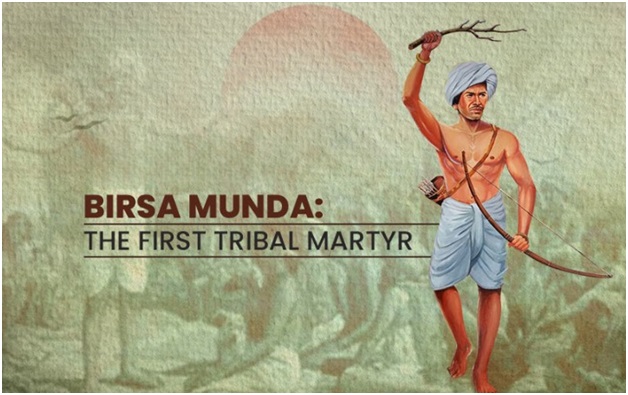
- 14 Nov 2023
Why in the News?
On Birsa Munday's birthday on Nov. 15th, PM Modi is scheduled to visit Ulihatu village, where the great leader's descendants live in an asbestos house.
About Birsa Munda:
- Birsa Munda was a tribal leader and folk hero who belonged to the Munda tribe.
- He was born on November 15, 1875, in the village of Ulihatu in the present-day Khunti district of Jharkhand.
- Birsa Munda is known for leading a rebellion against British colonial rule and the exploitation of tribal communities in the late 19th century.
- He was a charismatic leader and a devout Hindu.
- He preached a message of social and religious reform and advocated for the revival of traditional Munda culture and values.
- He also led a campaign against the conversion activities of Christian missionaries.
- In 1895, Birsa Munda launched a rebellion against the British.
- He and his followers attacked police stations, government buildings, and the homes of zamindars (landlords).
- The British responded with a heavy crackdown, and Birsa Munda was arrested in 1897.
- He was released from prison in 1898 but was rearrested in 1900 after he resumed his rebellion.
- Birsa Munda died in prison on June 9, 1900, at the age of 25.
- Birsa Munda's rebellion was a watershed moment in the history of the Indian independence movement.
- It inspired other tribal leaders to rise up against the British, and it helped to raise awareness of the plight of tribal communities in India.
- Birsa Munda is revered as a hero by tribal communities across India, and he is considered to be one of the pioneers of the Indian independence movement.
- In addition to his political activism, Birsa Munda was also a religious reformer.
- He founded a new religious movement called Birsait, which combined elements of Hinduism and tribal animism.
- Birsaitism is still practiced by some tribal communities in Jharkhand today.
- Birsa Munda's legacy continues to inspire people today, and he is remembered as one of the greatest heroes of the Indian independence movement.
- To honor Birsa Munda's significant influence on the national movement, the state of Jharkhand was established on his birthday in 2000.
- Recognizing his contributions, the Central Government declared November 15 as 'Janjatiya Gaurav Divas' in 2021.
Saturn’s Rings (Earth.com)

- 13 Nov 2023
Why in the News?
According to a recent report, Saturn's rings will vanish in just 18 months.
What are Saturn’s Rings?
- Saturn’s ring system is made up of countless small particles, ranging from micrometers to meters in size, that orbit the planet.
- These particles are mostly made of ice, with a smaller amount of rocky debris and dust.
- The rings are named alphabetically in the order they were discovered, with the main rings being A, B, and C.
- The rings are also home to countless icy fragments and are shrouded in a layer of cosmic dust.
- Recent research suggests that these objects might be relatively new in the cosmic timeline, potentially forming a mere 400 million years ago, making them younger than one-tenth of Saturn’s age.
About the Planet Saturn:
- Saturn is the sixth planet from the Sun and the second-largest in the solar system, after Jupiter.
- Saturn is a gas giant composed primarily of hydrogen and helium.
- It has a radius about nine times that of Earth, although it has a low density and is only about 95 times more massive than Earth.
- It has the highest number of satellites or moon, i.e., 146 in the solar system.
- Pioneer 11 and Voyagers 1 and 2 conducted flybys of Saturn, but Cassini extensively orbited the planet, completing 294 orbits from 2004 to 2017.
Exercise ‘CORPAT’ And ‘Bongosagar’ (NewsOnAir)
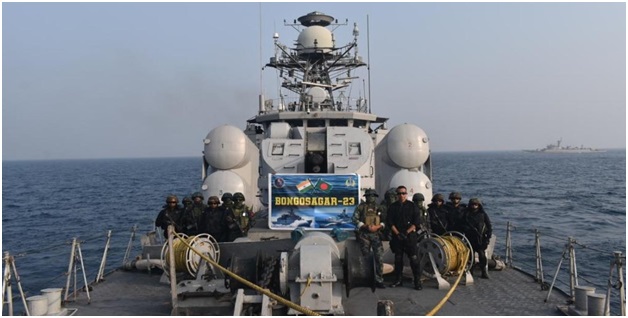
- 13 Nov 2023
Why in the News?
Recently, Exercise CORPAT and BONGOSAGAR between the Indian Navy and Bangladesh Navy were conducted in the Northern Bay of Bengal from 07 - 09 Nov 2023.
About Exercise CORPAT and Bongosagar:
- The 4th edition of the Bilateral Exercise between the Indian Navy and Bangladesh Navy, BONGOSAGAR-23, and the 5th edition of Coordinated Patrol (CORPAT) by the two navies were held at Visakhapatnam.
- Ships and aircraft from both navies undertook joint patrolling along the International Maritime Boundary Line and maritime exercises to enhance interoperability.
- Indian Navy Ships Kuthar, Kiltan, and Maritime Patrol Aircraft (MPA) Dornier participated in the exercise.
- The ships undertook communication drills, surface gun-shoots, tactical maneuvers, and other exercises.
- INS Kuthar is an indigenously built guided-missile Corvette, whereas INS Kiltan is an indigenously built anti-submarine Corvette.
- Both ships are part of the Indian Navy's Eastern Fleet based at Visakhapatnam, which functions under the operational command of the FOCINC ENC.
- CORPAT-23 also included the maiden Humanitarian Assistance and Disaster Relief drills held between the two navies.
- The bilateral exercises and coordinated patrols have strengthened mutual understanding and cooperation between the two navies.
India-OPEC Energy Dialogue (PIB)
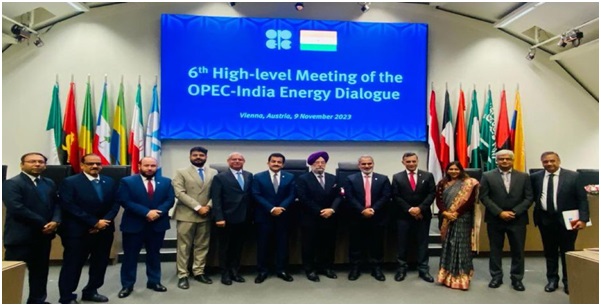
- 13 Nov 2023
Why in the News?
The 6th High-Level Meeting of the India-OPEC Energy Dialogue took place on 9 November 2023, at the OPEC Secretariat in Vienna, Austria
Highlights of the India-OPEC Energy Dialogue 2023:
- The 6th High-Level Meeting of the India-OPEC Energy Dialogue took place on November 9th, in Vienna, Austria.
- The Meeting was co-chaired by HE Haitham Al Ghais, Secretary General of OPEC, and Hardeep Singh Puri, Minister of Petroleum and Natural Gas and Minister of Housing and Urban Affairs of India.
- Discussions revolved around ensuring availability, affordability, and sustainability in energy markets, emphasizing India's crucial role in global economic growth and energy demand.
- The 6th High-Level Meeting concluded with both parties underscoring the importance of fostering enhanced cooperation between India and OPEC moving forward.
- It was agreed to hold the next High-Level Meeting of the India-OPEC Energy Dialogue during the course of 2024 in India.
About the Organization of the Petroleum Exporting Countries(OPEC):
- OPEC, or the Organization of the Petroleum Exporting Countries, is a permanent international organization comprising oil-exporting nations.
- Its core mission is to coordinate and unify the petroleum policies of its member countries.
- This coordination aims to stabilize oil prices in global markets, working towards eliminating harmful and unnecessary price fluctuations.
- It was established in 1960 by Iran, Iraq, Kuwait, Saudi Arabia, and Venezuela, OPEC has since expanded to include 13 members.
- Member countries are Algeria, Angola, Congo, Equatorial Guinea, Gabon, Iran, Iraq, Kuwait, Libya, Nigeria, Saudi Arabia, United Arab Emirates, and Venezuela.
- With the addition of another 11 allied major oil-producing countries including Russia, the grouping is known as OPEC+.
- The organization's headquarters is located in Vienna, Austria.
World Energy Outlook 2023 (IEA)
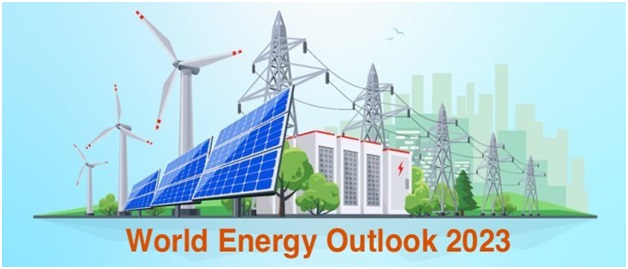
- 13 Nov 2023
Why in the News?
Recently, the International Energy Agency (IEA) released the World Energy Outlook (WEO) Report 2023.
About World Energy Outlook 2023:
- This flagship publication of the International Energy Agency (IEA) has appeared every year since 1998.
- It provides in-depth analysis and strategic insights into every aspect of the global energy system.
- This year, the report delves into how changes in economies and energy usage are meeting the increasing demand for energy amid geopolitical tensions and fragile energy markets.
- It evaluates the evolution of energy security fifty years after the establishment of the IEA and looks at what's necessary at the COP28 climate conference in Dubai to support the 1.5 °C goal.
- The publication analyzes today's energy trends, covering areas like investment, trade flows, electrification, and energy access.
About the International Energy Agency (IEA):
- The International Energy Agency (IEA) is an independent inter-governmental organization operating within the framework of the Organisation for Economic Co-operation and Development (OECD).
- Its mission involves collaborating with governments and industry to create a secure and sustainable energy future.
- Established in 1974 to safeguard oil supplies, it was a response to the 1973-1974 oil crisis, which exposed the vulnerability of industrialized nations to oil import dependencies due to an oil embargo.
- Comprising 31 member countries and eleven association countries, IEA candidates must be OECD members.
- India joined as an Associate member in 2017.
- The IEA publishes reports such as the World Energy Outlook, World Energy Balances, Energy Technology Perspectives, World Energy Statistics, and Net Zero by 2050.
AAINA Dashboard for Cities’ Portal (PIB)
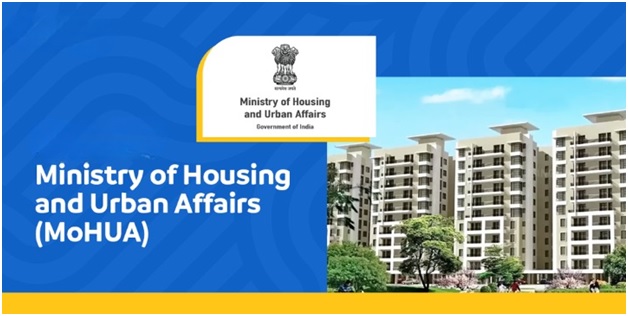
- 13 Nov 2023
Why in the News?
‘AAINA Dashboard for Cities’ portal aims to create a robust database of key performance metrics of Urban Local Bodies
About AAINA Dashboard for Cities:
- AAINA – Dashboard for cities, an initiative of the Ministry of Housing and Urban Affairs (MoHUA) is being envisaged which would serve as a tool for comparing similarly placed Urban Local Bodies (ULBs) and promoting peer learning amongst ULBs.
- This dashboard will inspire the ULBs by pointing to possibilities and areas of improvement and providing them the opportunity to learn and engage with frontrunners.
- It will provide information on the status and progress of the cities on five broad thematic areas viz.
- Political and Administrative Structure
- Finance
- Planning
- Citizen Centric Governance and
- Delivery of Basic Services.
- Urban Local Bodies (ULBs) can voluntarily submit their key data through a simple form on the portal.
- ULBs will submit audited accounts and performance metrics, which they can update when needed.
- The dashboard aims to be a permanent platform for ULB data, regularly updated for stakeholders and eventually open for public view.
- The Ministry, through the Digital India Corporation, will help ULBs/States with the data submission process.
- Currently, information about all the ULBs in the country isn’t available on one platform.
- The idea is to provide a platform for ULBs to learn from each other and also have critical data, which can be used in the future for planning new schemes and taking policy decisions
Attenborough's Long-beaked Echidna (The Hindu)
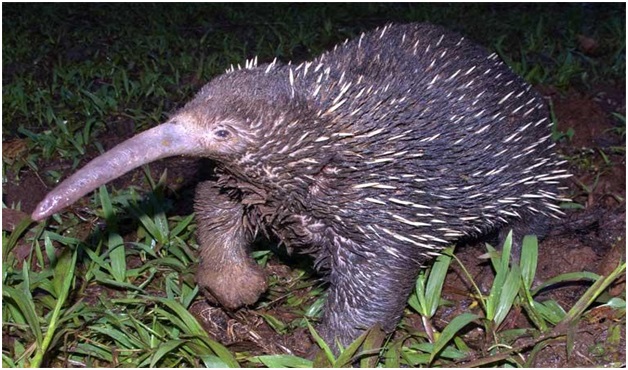
- 11 Nov 2023
Why in the News?
An elusive echidna feared extinct after disappearing for six decades has been rediscovered in a remote part of Indonesia, on an expedition that also found a new kind of tree-dwelling shrimp.
About Attenborough's long-beaked echidna:
- Attenborough's long-beaked echidna (Zaglossus attenboroughi), also known as Sir David's long-beaked echidna or the Cyclops long-beaked echidna.
- It is an egg-laying mammal native to the Cyclops Mountains in the northern Indonesian region of Papua.
- It is one of three species of long-beaked echidna, and is the smallest and most threatened of the three.
- The echidna was named after naturalist Sir David Attenborough.
- The echidna is a nocturnal animal, and it is most active at night.
- It spends its days sleeping in burrows, and it emerges at night to forage for food.
- The echidna's diet consists of ants, termites, beetles, and other insects.
- Attenborough's long-beaked echidna is classified as Critically Endangered by the IUCN.
5th Annual India- US ‘2+2’ Dialogue (The Hindu)
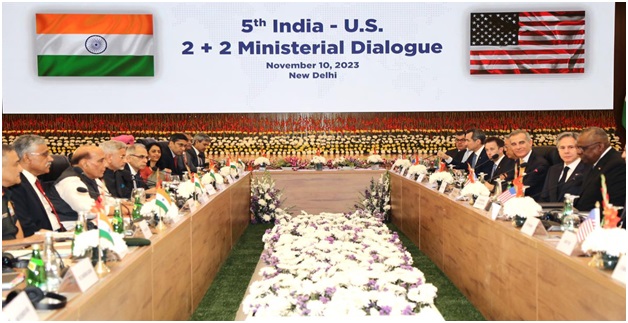
- 11 Nov 2023
Why in the News?
India and the U.S. on November 10 held extensive deliberations to further expand their global strategic partnership through greater defence industrial ties, enhancing engagement in the Indo-Pacific and boosting cooperation in key areas such as critical minerals and high technology.
Context:
- The fifth annual ‘2+2’ dialogue between India and the United States is underway in New Delhi.
- The U.S. delegation at the 2+2 ministerial talks was led by U.S. Secretary of State Antony Blinken and U.S. Defence Secretary Lloyd Austin.
- External Affairs Minister S Jaishankar and Defence Minister Rajnath Singh headed the Indian side.
What is the 2+2 Dialogue?
- The 2+2 Ministerial Dialogue, an annual diplomatic summit being held since 2018, brings together India's foreign and defence ministers with their US counterparts.
- Its purpose is to address and collaborate on common concerns to enhance and strengthen India–United States relations.
- A 2+2 ministerial dialogue enables the partners to better understand and appreciate each other’s strategic concerns and sensitivities taking into account political factors on both sides, in order to build a stronger, more integrated strategic relationship in a rapidly changing global environment.
- India has 2+2 dialogues with four key strategic partners: the US, Australia, Japan, and Russia.
- Besides Russia, the other three countries are also India’s partners in the Quad.
- The US is India’s oldest and most important 2+2 talks partner.
Cell Broadcast Alert System (CBAS) (The Hindu)

- 11 Nov 2023
Why in the News?
The Cell Broadcast Alert System (CBAS) of the National Disaster Management Authority (NDMA) did not effectively disseminate mass alerts during natural disasters, despite recent testing.
About Cell Broadcast Alert System (CBAS):
- The Cell Broadcast Alert System (CBAS) is a public warning system that uses mobile networks to send emergency alerts to mobile phones within a specific geographic area.
- It is a one-way messaging system that allows authorized authorities to send short messages to all mobile phones within a designated area, regardless of whether the recipients are subscribed to the mobile network or not.
Benefits of CBAS:
- Rapid and widespread dissemination of information: CBAS can reach a large number of people within a short period of time, making it an effective tool for communicating critical information during emergencies.
- No user interaction required: CBAS messages are automatically displayed on mobile phones, so there is no need for users to take any action to receive them.
- Effective for reaching all mobile phone users: CBAS messages can be received by all mobile phone users, regardless of whether they are subscribed to a particular mobile network or not.
- Not affected by network congestion: CBAS messages are not affected by network congestion, so they can be delivered even when network traffic is heavy.
CBAS can be used to send a variety of emergency alerts, including:
- Weather warnings: CBAS can be used to warn people of impending severe weather, such as tornadoes, hurricanes, and flash floods.
- Amber Alerts: CBAS can be used to broadcast information about missing children.
- Public safety alerts: CBAS can be used to warn people of other public safety threats, such as fires, terrorist attacks, and chemical spills.
Phreatomagmatic Eruptions (TOI)
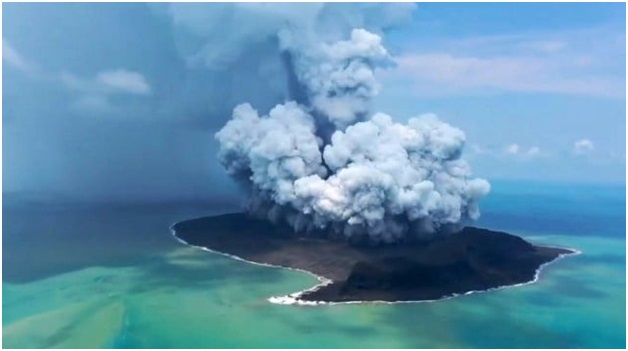
- 11 Nov 2023
Why in the News?
Recently a new island emerged near Japan's Ogasawara island chain after an undersea volcano erupted.
What is Phreatomagmatic Eruption?
- A phreatomagmatic eruption is a volcanic eruption caused by the interaction of magma and water.
- They differ exclusively from magmatic and phreatic eruptions.
- Unlike phreatic eruptions, the products of phreatomagmatic eruptions contain juvenile (magmatic) debris.
- Large explosive eruptions typically contain magmatic and phreatomagmatic components.
- Phreatomagmatic ash is formed by the same mechanism over a wide range of basic and acidic compositions.
- A blocky and uniform crust with low vesicle content is formed.
- Deposits from phreatomagmatic eruptions are thought to be better classified and finer-grained than those from magmatic eruptions.
- This is the result of higher fragmentation of phreatomagmatic eruptions.
About Ogasawara Islands:
- The Ogasawara Islands are a group of more than 30 small subtropical islands in the North-Western Pacific Ocean roughly 1,000 km south of the main Japanese Archipelago.
- It is also known as the Bonin Islands.
- It is one of the famous UNESCO World Heritage sites of Japan.
Vampire Viruses (TOI)
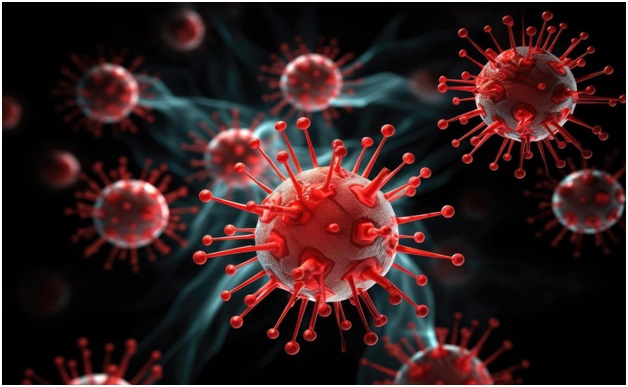
- 11 Nov 2023
Why in the News?
For the first time, several ‘vampire viruses have been detected in the soil samples in the USA recently.
About Vampire Viruses:
- "Vampire viruses", also known as virophages, are viruses that parasitize other viruses.
- They have been known to science for decades, but this is the first time they have been discovered in the United States.
- The viruses were found in soil samples from Maryland and Missouri.
- Virophages are thought to attach themselves to other viruses and inject their own genetic material into the host-virus.
- This genetic material then takes over the host virus's replication machinery, allowing the virophage to reproduce itself.
- The host-virus is eventually destroyed in the process.
- Virophages could be used to control harmful viruses that infect crops or livestock.
- They could also be used to design new antiviral drugs that target viruses in a more specific way than current drugs.
- However, the discovery of virophages also raises some concerns.
- Virophages could potentially kill beneficial viruses that play an important role in the environment.
- For example, some viruses help to break down organic matter in soil, while others help to control populations of harmful bacteria.
Energy Conservation Building Code (ECBC) (Indian Express)
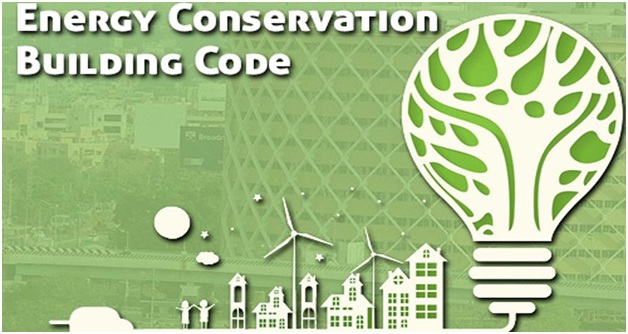
- 10 Nov 2023
Why in the News?
Paris-based International Energy Agency highlighted India’s Energy Conservation Building Code (ECBC), 2017 as something that sets it apart from other developing economies where “energy efficiency in buildings stands out as a laggard”.
About Energy Conservation Building Code (ECBC):
- Energy Conservation Building Code (ECBC) Released by the Bureau of Energy Efficiency (BEE).
- It was first released in 2007 and again updated in 2017.
- The purpose of ECBE is to set minimum energy standards for commercial buildings, with the objective of enabling energy savings of between 25 and 50% in compliant buildings.
- Commercial buildings include hospitals, hotels, schools, shopping complexes and multiplexes which have a connected load of 100 kW or more, or contract demand of 120 kVA or more.
- Also the code is for both new buildings and retrofitting existing buildings.
- Assessment Parameters: The Energy Conservation Building Code (ECBC) primarily looks at parameters like building design including envelope (walls, roofs, windows), lighting systems, and renewable energy integration among others.
- Tagging of buildings: Compliant buildings are assigned one of three tags in ascending order of efficiency, namely ECBC, ECBC Plus, and Super ECBC.
- 23 out of 28 states have notified ECBC rules. But only 15 states have notified rules based on the latest ECBC,2017.
- Five states — Gujarat, Maharashtra, J&K, Ladakh, and Manipur — are yet to notify ECBC rules.
Aurora (Indian Express)

- 10 Nov 2023
Why in the News?
Recently, NASA shared this incredible image of an aurora taken from the International Space Station.
What is Aurora?
- An aurora is a natural light display that shimmers in the sky.
- They are only visible at night, and usually only appear in lower polar regions.
- Auroras come in colors like blue, red, yellow, green, and orange.
- They're mostly visible near the Arctic and Antarctic Circles, known as the aurora borealis and aurora australis, respectively.
- These natural light shows occur when the solar wind from the sun meets Earth's magnetic field, creating a beautiful halo of light around the poles.
- This collision between solar wind ions and Earth's atmosphere atoms leads to stunning auroras.
- Their color depends on altitude and the atoms involved.
- Red comes from oxygen ions higher up, while the familiar green-yellow hues arise from interactions at lower altitudes.
- Sometimes, reddish and bluish tints appear, created by ions colliding with nitrogen atoms.
- The most active auroras happen when the solar wind is strongest, affected by solar weather changes, which follow an 11-year cycle.
- Equinoxes and magnetic storms can cause auroras to be seen even in mid-latitudes, affecting communication signals and occasionally causing disruptions.
- Auroras are a natural spectacle, painted by the collision of solar wind and Earth's atmosphere, creating these dancing lights in the night sky.
Bioluminescent Fungi 'Mycena Chlorophos' (The New Indian Express)
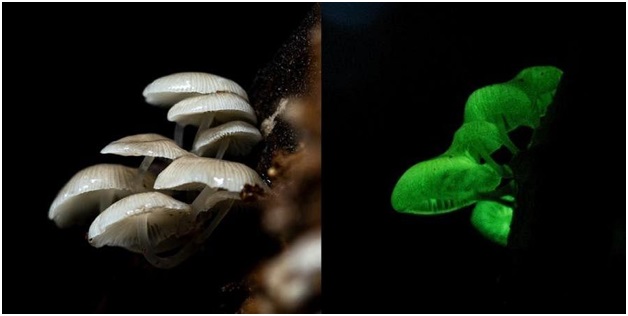
- 10 Nov 2023
Why in the News?
A team of researchers and the forest department have found a rare bioluminescent mushroom in the Kanyakumari Wildlife Sanctuary (KKWLS).
About Mycena chlorophos:
- Mycena chlorophos is a species of bioluminescent fungus, meaning that it can produce its light.
- It is primarily found in subtropical Asia, including India, Japan, Taiwan, Polynesia, Indonesia, and Sri Lanka, as well as in Australia and Brazil.
- The bioluminescence is produced through a chemical reaction that involves luciferin, a light-emitting molecule, and the enzyme luciferase.
- Luciferase catalyzes the oxidation of luciferin, which produces light.
- The luciferin in Mycena chlorophos is a compound called trans-3-hydroxyhispidin.
- This compound is also found in other bioluminescent fungi, such as Neonothopanus nambi and N. gardneri.
- The bioluminescence of Mycena chlorophos is thought to serve several functions.
- It may help the fungus to attract insects, which can help to disperse its spores.
- It may also help the fungus to ward off predators.
What is Bioluminescence?
- It is the ability of living organisms to emit light.
- It occurs due to a biochemical reaction between luciferins, oxygen, and the enzyme luciferase.
- The benefit of bioluminescence in fungi is to attract insects to facilitate their spore dispersal.
Radiative Cooling Paint (The Hindu)
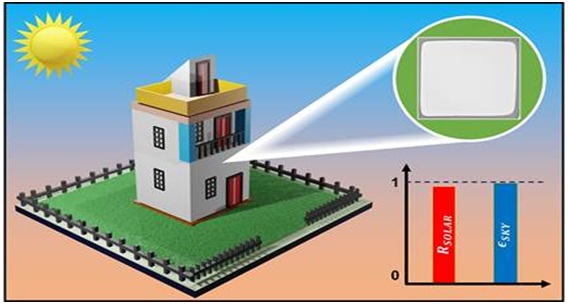
- 10 Nov 2023
Why in the News?
Researchers from Jawaharlal Nehru Centre for Advanced Scientific Research (JNCASR) have developed a radiative cooling paint, which is specifically engineered to cool structures like buildings, pavers, and tiles in hot weather conditions.
What is Radiative Cooling Paint?
- Material Composition: Radiative Cooling Paint is composed of a mix of magnesium oxide (MgO) and polyvinylidene fluoride (PVDF), derived from easily accessible, cost-effective, and safe materials.
- The optimized MgO-PVDF with dielectric nanoparticles resulted in a large solar reflectance of 96.3% and a record high thermal emission of 98.5% due to Mg?O bond vibrations, and other stretching/bonding vibrations from the polymer.
- Cooling Mechanism: This paint stands out not only for its appearance but for its function.
- It reflects nearly all of the sun's heat and emits a significant amount of its heat, effectively maintaining cooler surfaces.
- Heat Management: Tailored for hot climates, it efficiently reduces the need for excessive electricity use to cool buildings during sweltering days.
- Temperature Reduction: Once applied, it notably lowers surface temperatures by approximately 10 degrees under intense sunlight, surpassing the performance of regular white paint.
- Application Ease: Additionally, it showcases water-resistant properties and excellent adhesion to various surfaces, simplifying the application process on structures like walls and roofs.
Green Firecrackers (The Hindu)
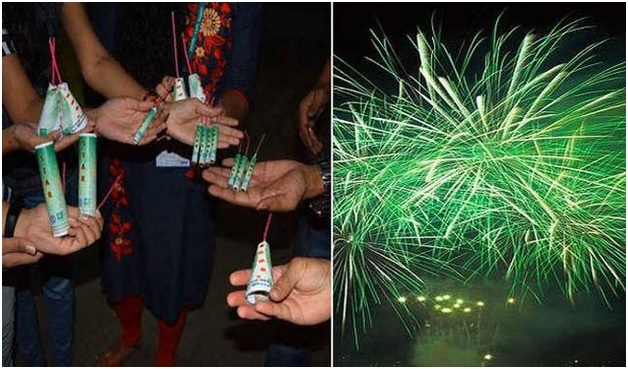
- 10 Nov 2023
Why in the News?
Both government agencies and conscious citizens in Bengaluru are actively ensuring that only less polluting green crackers are being sold and bought this Deepavali.
What are Green firecrackers?
- Green firecrackers are a type of fireworks designed to produce fewer pollutants and emissions compared to traditional firecrackers.
- They are crafted to be more environmentally friendly by using cleaner ingredients, and emitting less smoke and harmful chemicals upon combustion.
- There are mainly three types of green firecrackers: SWAS, SAFAL, and STAR.
- They are not only eco-friendly but 15-20 % cheaper than the conventional ones.
- In 2018, the Council of Scientific and Industrial Research-National Environmental Engineering Research Institute (CSIR-NEERI) introduced the idea of green crackers.
What are they made of?
- Green firecrackers are marked by reduced size of shell, elimination of ash usage, reduced usage of raw material in the compositions, and have a uniformly acceptable quality.
- They use additives as dust suppressants to reduce emissions with specific reference to particulate matter (PM).
- These crackers lack the barium compounds responsible for their unique green hue.
- Barium, a metallic oxide, is known to contribute to air pollution and noise pollution.
- When green crackers are ignited, they produce water vapor, thereby minimizing dust emissions.
- In terms of sound levels, green firecrackers generate noise ranging from 110 to 125 decibels, making them significantly quieter than traditional firecrackers, which typically produce around 160 decibels, resulting in nearly 30% less noise.
Cops lose Rs 12 crore in chit fund scheme, probe on (TOI)
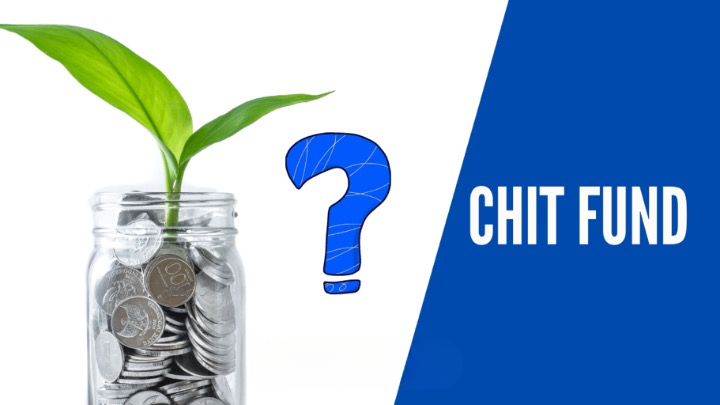
- 20 Dec 2023
Why is it in the News?
Around 70 persons belonging to AP special police have lost nearly Rs 12 crore in a chit fund scheme in Mangalagiri, said the police. Mangalagiri police registered a case and launched an public sector investigation.
What are Chit Funds?
- Chit funds, also known as Kuri and Chitty, serve as versatile financial instruments encompassing both borrowing and saving components.
- In this financial arrangement, a group of individuals collectively contributes a fixed sum at regular intervals, with the understanding that one member will receive the total pooled amount during each interval.
- This process repeats until every member has received their share.
- Typically managed by a chit-fund company, this financial instrument operates by having a group of contributors make regular contributions toward the chit value for a duration equivalent to the total number of subscribers.
- The recipient of the pooled money is determined through an auction or lucky draw, employing a reverse auction system where the individual willing to accept the lowest amount is chosen.
- The sum forfeited by the winning bidder is distributed among other bidders, deducting a foreman's charges and commission.
- The share each bidder receives is termed a dividend. Interestingly, a winning bidder can continue to invest in subsequent intervals, even after claiming their sum.
Types of Chit Funds:
Chit funds can be categorized into three types:
- Chit Funds Run by State Governments:
- Managed and regulated by state governments.
- Public sector undertakings (PSUs) also fall under this category.
- These funds are considered safe, with limited chances of loss. Business processes are transparent and well-regulated.
- Private Registered Chit Funds:
- Registered under the Chit Funds Act of 1982.
- Typically initiated by well-established financial institutions or business entities.
- While participation in these funds may not be as secure as state-run or public-sector funds, the calculated risk is manageable due to their association with reputable private-sector entities.
- Unregistered Chit Funds:
- These chit-funds lack legal recognition, and participation involves a higher risk.
- Commonly found throughout India, they are often formed by a close-knit group of associates.
- Participation in unregistered chit funds is discouraged due to the potential for disputes, which rely heavily on the integrity and honesty of the members involved.
What is Saradha Chit Fund Scam?
- The Saradha scam, also known as the Saradha Group financial scandal, was a major financial scam that surfaced in 2013.
The Saradha scheme:
- The scheme, run by Saradha Group (an umbrella company with 200 private players), was launched in the early 2000s by businessman Sudipto Sen.
- Aimed at small investors, the scheme became popular in a very short time as it promised high returns.
- The money was collected through a wide network of agents, who were paid commissions of over 25 per cent.
- The Saradha Group raised about Rs 2,500 crore in a few years time.
- The company used varied marketing means to build its brand.
- Apart from popular marketing techniques like celebrity endorsements, the company used to sponsor cultural events such as Durga Puja and invest in popular football clubs to attract more investors.
- The scheme soon expanded to Odisha, Assam, and Tripura, and the number of investors reached close to 1.7 million.
US launches Red Sea force as ships reroute to avoid attacks (The Hindu)
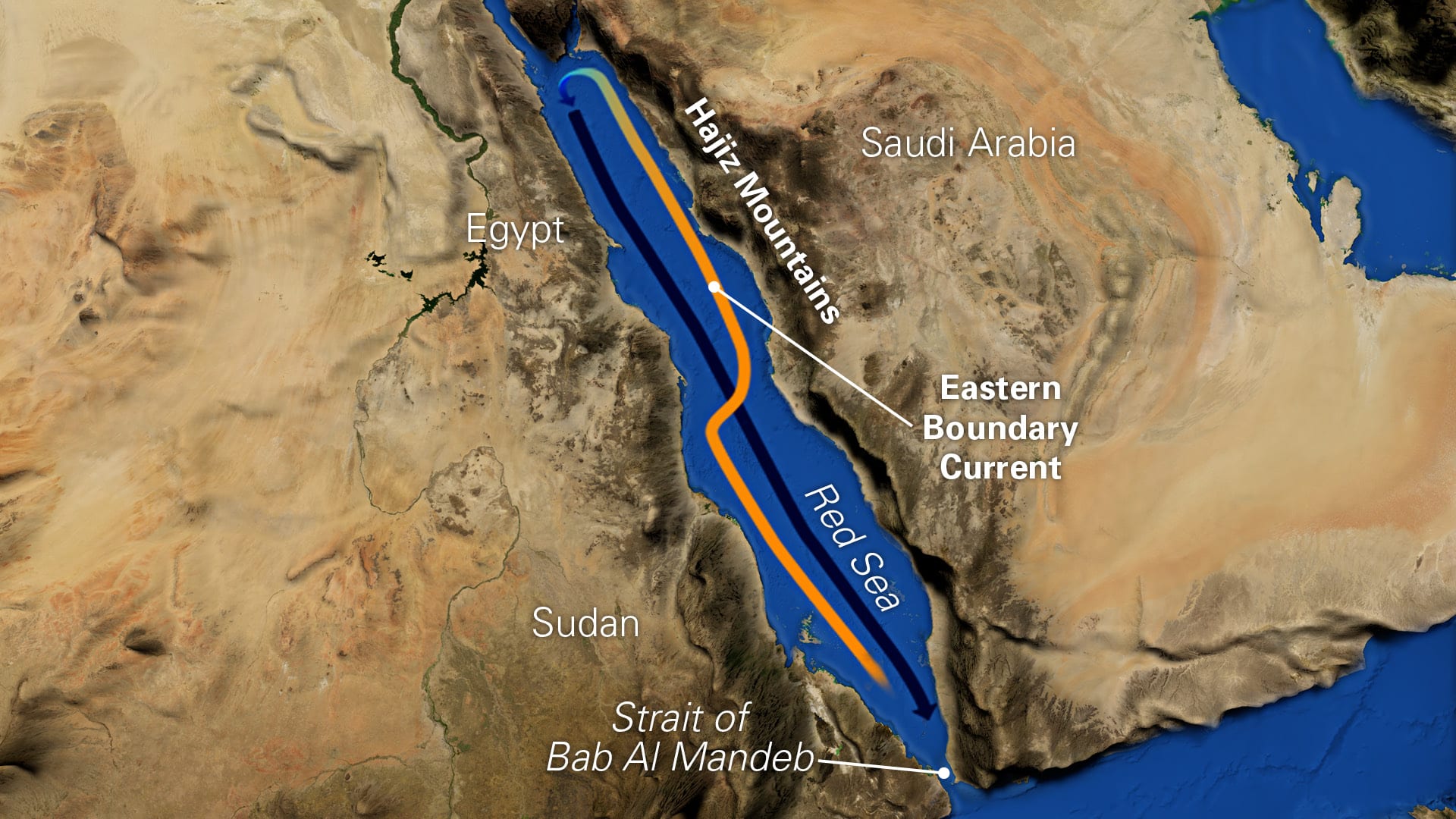
- 20 Dec 2023
Why is it in the News?
U.S. Defense Secretary Lloyd Austin on Tuesday announced the creation of a multinational operation to safeguard commerce in the Red Sea following a series of missile and drone attacks by Yemen's Iran-aligned Houthis.
Context:
- The U.S. Defense Secretary recently revealed the establishment of a multinational operation to protect commerce in the Red Sea.
- This decision comes in response to a string of missile and drone attacks by Yemen's Iran-aligned Houthis.
- The gravity of these attacks has prompted several shipping companies to instruct their vessels to remain stationary and avoid entering the Bab el-Mandeb Strait until the security concerns are addressed.
About the Red Sea:
- The Red Sea is a narrow waterway extending southeastward from Suez, Egypt, to the Bab el-Mandeb Strait.
- The Bab-el-Mandeb Strait links the Red Sea to the Gulf of Aden, providing a connection between the Mediterranean Sea and the Arabian Sea.
- Essentially, it is a narrow inland sea positioned between the Arabian Peninsula and Africa.
- The Red Sea acts as a boundary, separating the coastlines of Egypt, Sudan, and Eritrea from those of Saudi Arabia and Yemen.
- The Gulf of Aqaba, an extension to the northeast, stretches into southern Israel and southwestern Jordan.
- Significance: The Red Sea boasts some of the planet's hottest and saltiest seawater.
- It stands as one of the most heavily traversed water routes globally, facilitating maritime traffic between Europe and Asia.
- Relevance for India:
- Potential disruptions along this route could lead to a significant surge, up to 25-30%, in freight rates for Indian shipments bound for Europe and Africa.
- For India, the Red Sea trade route serves as the most direct path for ships traveling from Asia to Europe.
- India heavily depends on the Bab-el-Mandeb Strait for crucial aspects such as crude oil, LNG imports, and trade with regions in West Asia, Africa, and Europe.
- This passage is critical, accounting for 30% of global container traffic.
Who are the Houthi Rebels?
- The Houthis are a Shiite Muslim sect with roots that date back centuries in Yemen.
- Members of the religion are a minority in Yemen, which is predominantly Sunni Muslim, but they are a significant one, numbering in the hundreds of thousands and making up as much as a third of the overall population.
- Named after the Houthi tribe, they adhere to Zaydi Shia beliefs within Islam, emphasizing the lineage of Prophet Muhammad's family as the political leaders of the state.
- Also recognized as Ansar Allah, translating to "Supporters of God."
- Involvement in Yemen's Civil War: A major faction in Yemen's nearly decade-long civil war, starting in 2014 when Houthi insurgents seized control of Yemen's capital, Sanaa.
- By early 2015, Saudi Arabia, supported by other Gulf states and the U.S., conducted airstrikes against the Houthis, who have backing from Iran.
- Although a ceasefire was signed in 2022, it lapsed after six months, with the parties involved not returning to full-scale conflict.
- Houthi Attacks on Red Sea Ships:
- Iran-backed Houthi rebels from Yemen have targeted ships in the Red Sea in response to Israel's military actions in Gaza.
- The Houthis, supporting Hamas, declared on November 19 their intent to attack vessels they believe are traveling to and from Israel.
Full-blown late blight attack damages potato crops in Punjab (Indian Express)
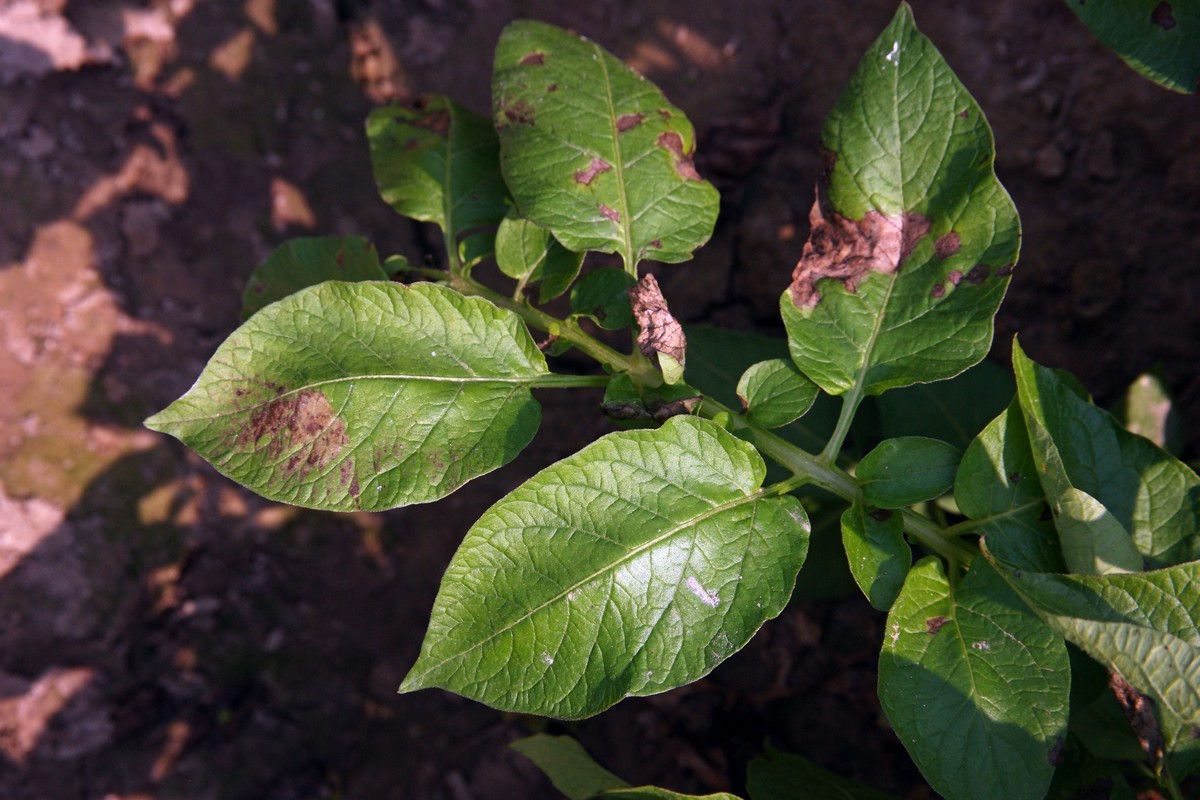
- 20 Dec 2023
Why is it in the News?
Days after the experts from Punjab Agricultural University (PAU) had cautioned farmers against the late blight disease attack on potato crop, the worst fears of the potato farmers have come true.
About Late Blight Disease:
- Late Blight disease is attributed to the fungus Phytophthora infestans and stands as a significant threat to potato crops, potentially causing rapid failures if appropriate control measures are not implemented.
- Common in humid regions with specific temperature conditions, this disease manifests with initial symptoms of small, light to dark green, circular to irregular water-soaked spots.
- In cool, moist weather, these spots rapidly expand into large, dark brown or black lesions, often exhibiting a greasy appearance.
- A pale green to yellow border typically surrounds these lesions.
- The spread of Late Blight is facilitated by infected tubers and soil, acting as a primary source of infection.
- Infected tubers play a crucial role in the disease's persistence from one crop to another. Airborne infection occurs through sporangia.
- Effective control measures involve the prompt destruction of infected crop residue in the field to prevent the disease from spreading to nearby areas.
Diseases Caused by Bacteria on Potato Crops:
- Ring Rot
- Brown Rot
Diseases Caused by Fungi on Potato Crops:
- Late Blight
Diseases Caused by Virus on Potato Crops:
- Leaf Roll
- Mosaic
First Prehistoric Pictorial Cave Art Found in Madagascar Offers Clues Regarding Ancient Connections Between Borneo, Egypt (The Hindu)
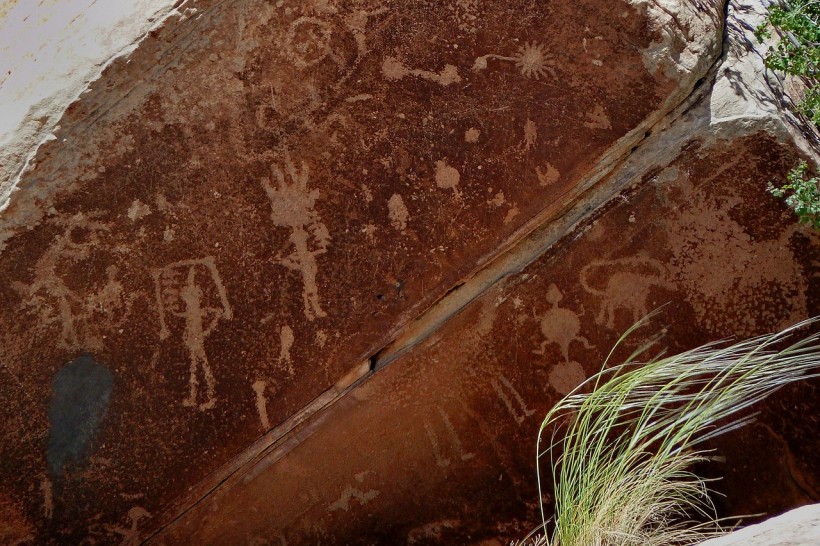
- 20 Dec 2023
Why is it in the News?
Recently, distinctive prehistoric rock art depictions were unearthed within the Andriamamelo Cave in western Madagascar.
Key Discoveries:
- Within this cave's truly pictorial art, human-like and animal-like figures depicting scenes from nature have been revealed.
- The remarkable findings unveiled surprising cultural connections, with some scenes directly linking to Egyptian religious motifs from the Ptolemaic period (300-30 BCE).
- Additionally, symbols and inscriptions on the cave walls indicated connections to the Ethiopian and Afro-Arab regions.
- Furthermore, the prevalent symbology and motifs echoed a cave art style from Borneo dating back two millennia.
- Notably, depictions within the cave may include three extinct animals of Madagascar — a giant sloth lemur, an elephant bird, and a giant tortoise.
- The potential connection to Egypt is suggested by eight significant images, including representations of a falcon (Horus), the bird-headed god Thoth, the ostrich goddess Ma`at, and two human-animal figures resembling Anubis, the ancient Egyptian god typically portrayed with a canine head.
About Andriamamelo Cave:
- The Andriamamelo Cave is situated in western Madagascar, nestled within the karstified limestone of the Paysage Harmonieux Protege de Beanka.
- This cave is a component of a vast karst region that encompasses the UNESCO World Heritage site, Parc National de Bemaraha, to the south, and the less-explored Antsingimavo karst area to the north.
Goa Liberation Day: Why India waited for 14 years after independence to move troops to Goa (Indian Express)
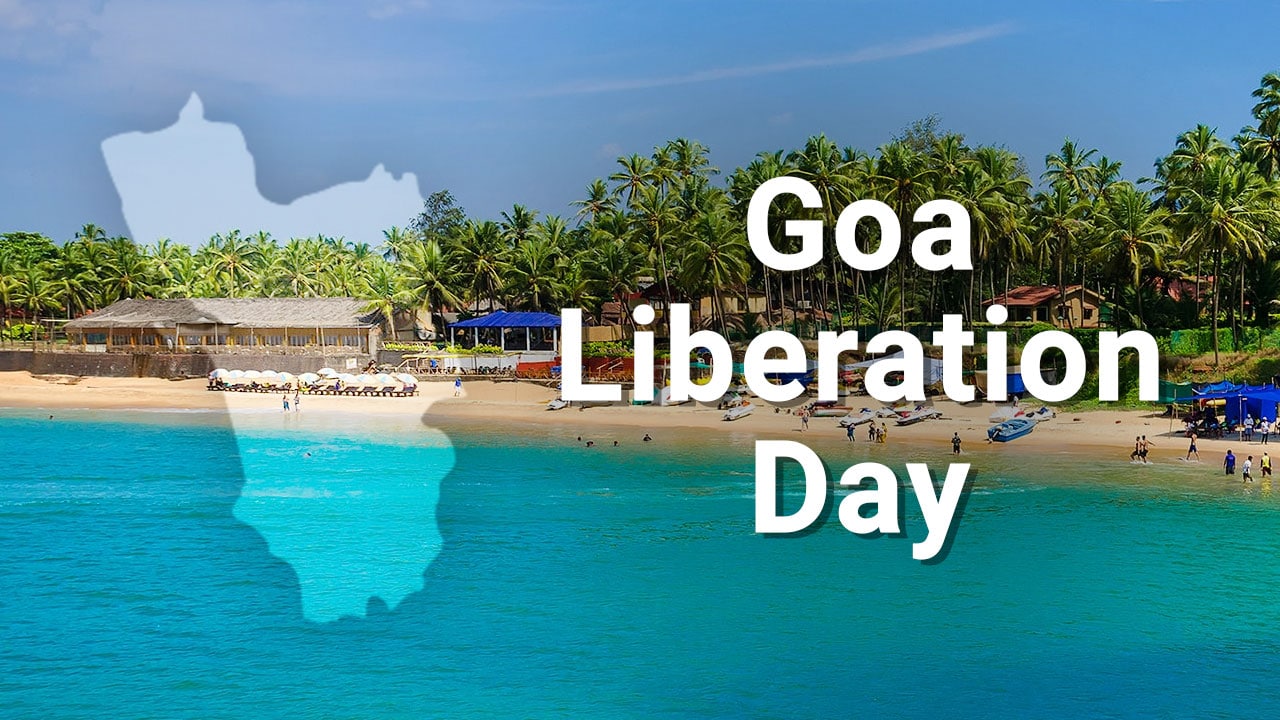
- 20 Dec 2023
Why is it in the News?
Goa Liberation Day is commemorated annually on December 19. In 2023, we observe the 62nd anniversary of the liberation of Goa.
Key Highlights:
- This day commemorates the liberation of Goa in 1961 by the Indian armed forces, ending 450 years of Portuguese rule.
- Portuguese colonization in India began in 1510, but by the late 19th century, their colonies were limited to Goa, Daman, Diu, Dadra, Nagar Haveli, and Anjediva Island.
- After India's independence in 1947, attempts to persuade Portugal to cede their territories were unsuccessful.
- The Goa liberation movement gained momentum from small-scale revolts, peaking between 1940 and 1960.
- In 1961, diplomatic efforts failed and Operation Vijay was executed, leading to the annexation of Daman, Diu, and Goa to the Indian mainland on December 19.
About Operation Vijay:
- Operation Vijay, a 36-hour military initiative initiated on December 18, 1961, and concluded on December 19, 1961, aimed at liberating the Portuguese territories of Goa, Daman, and Diu.
- This marked a significant milestone as possibly the first tri-service operation by the Indian armed forces.
- The Indian Air Force executed bombings on the Portuguese airbase at Dabolim, complementing the army's advancement from the north and east into Goa.
- Simultaneously, the Indian Navy played a crucial role in preventing hostile actions by Portuguese warships, securing access to Mormugao harbor, and establishing control over the Anjadip Island off the coast of Karwar.
- By the evening of December 19, 1961, Portuguese Governor General Vassalo De Silva signed the surrender document as the Indian armed forces, led by the army with support from the air force and navy, had effectively outnumbered and outgunned the Portuguese forces.
Granting Statehood to Goa after Liberation:
- Following its liberation, Goa came under the administration of the Indian government, becoming a constituent of the Indian Union as the Union Territory of Goa, Daman, and Diu.
- However, in 1967, a plebiscite was conducted to decide on the potential merger of the state with Maharashtra.
- The majority of Goans voted against the merger, leading to the continuation of its status as a Union Territory.
- This arrangement persisted until 1987 when Goa was accorded statehood, emerging as the 25th state of India.
- Meanwhile, Daman and Diu retained their status as a Union Territory.
Electoral Trusts (ET) Scheme (Indian Express)
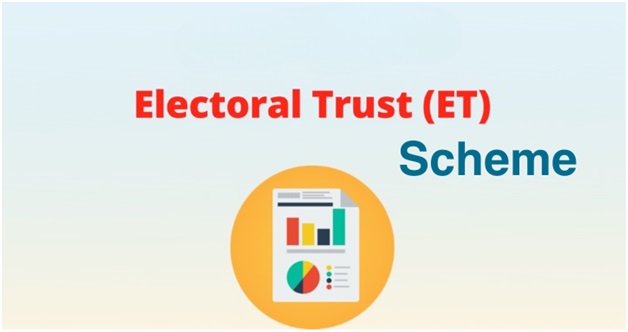
- 09 Nov 2023
Why in the News?
After a three-day hearing, the Supreme Court has reserved its judgment on the challenge to the Central government’s Electoral Bonds Scheme.
About Electoral Trusts (ET):
- As per Section 17CA of Income Tax Rules (1962), an Electoral Trust (ET) is a non-profit organization established for the orderly receipt of voluntary contributions from any person for distributing the same to political parties, registered under Section 29A of the Representation of People Act, 1951.
- This Scheme was notified in January 2013 by the then UPA government.
- Objective of Electoral Trust:
- Electoral Trusts are designed to bring more transparency in the funds provided by corporate entities to the political parties.
- The objective of an Electoral trust is not to receive any profit or pass on any direct or indirect benefit to its members or contributors.
- An Electoral trust will distribute funds only to eligible Political parties.
- These trusts are approved by the Central Board of Direct Taxes (CBDT) in accordance with the Electoral Trust Scheme of 2013.
- The ET may receive voluntary contributions from:
- an Individual (citizen of India)
- a Company registered in India
- a Firm or HUF or Associations of Persons or Body of Individuals resident in India
- The electoral trusts have to apply for renewal every three financial years.
INDUS-X Initiative (Financial Express)
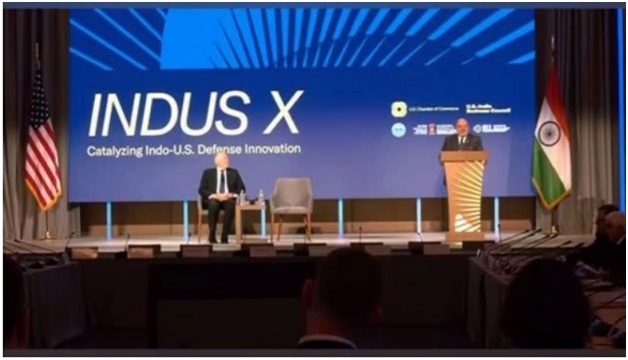
- 09 Nov 2023
Why in the News?
On the eve of the India-US 2+2 Ministerial Dialogue, the inaugural INDUS-X Investors Meet was held in New Delhi.
What is the INDUS X Initiative?
- The INDUS-X initiative, also known as the India-U.S. Defense Acceleration Ecosystem, was launched in June 2023 during the State Visit of the Prime Minister of India to the United States.
- Its primary objective is to expand the strategic technology partnership and defense industrial cooperation between the governments, businesses, and academic institutions of India and the United States.
- INDUS-X is envisioned as a defense innovation bridge, encompassing Joint Challenges, a Joint Innovation Fund, academia engagement, industry-startup connections, private sector investment in defense projects, mentorship by experts, and niche technology projects, among other initiatives.
- This collaborative effort holds the promise of ushering in a new era of defense innovation and cooperation between India and the United States.
About INDUS X Investors Meet:
- The first-ever INDUS-X Investors Event brought all the stakeholders including Startups, Investors, Incubators, and Industry from both sides under one roof to discuss the collaborative agendas and opportunities thereon.
- The event also had focused panel discussions with a select audience of 50 thought leaders, including start-ups, investors, government officials, and business leaders from the defence industry.
- The panel discussed ‘Investment Opportunities in the Defence Sector’, elaborating upon establishing a sustainable commercial foundation for defence collaboration and co-production.
- The INDUS-X Educational Series (Gurukul) was also launched during the event.
- The Gurukul initiative is aimed at helping innovators and startups to navigate the defence eco-system of the US and India.
Palamu Tiger Reserve (TOI)
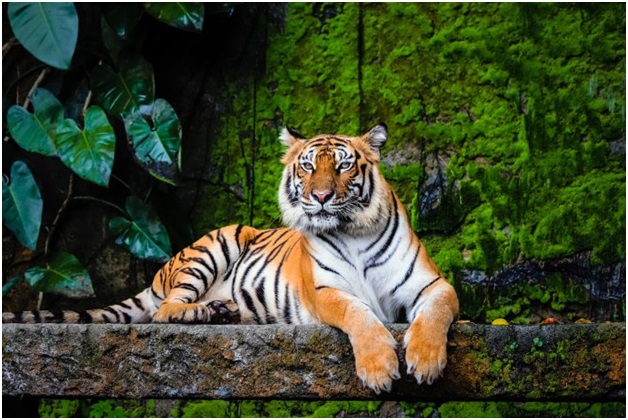
- 09 Nov 2023
Why in the News?
A recently captured image in the Palamu Tiger Reserve (PTR) reveals a new tiger, distinct from the one caught earlier this year.
About Palamau Tiger Reserve:
- The Palamau Tiger Reserve is located on the western side of Latehar district on the Chhotanagpur plateau in Jharkhand.
- It is one of the first 9 tiger reserves established in the country at the inception of ‘Project Tiger’, in the year 1973 in India and the only one in the state of Jharkhand.
- This reserve forms a part of the Betla National Park.
- The total area of the Tiger Reserve is 1129.93 sq. km
- It is the first reserve in the world in which a tiger census was carried out as a pugmark count, as early as 1932 under the supervision of J.W. Nicholson.
- The Palamau Tiger Reserve is very important for its biodiversity.
- The project area is constituted mainly of Sal forests, mixed deciduous forests, and bamboo groves.
- The reserve zone is the watershed area for 3 important rivers Koel, Burha, and Auranga.
Hermes 900 Star Liner (The Hindu)
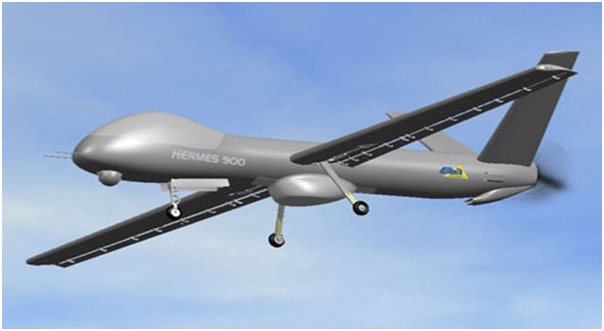
- 09 Nov 2023
Why in the News?
Adani Aerospace and Defence in partnership with Elbit Systems manufactures the complete carbon composite aerostructures for Hermes 900 and Hermes 450 in Hyderabad.
About Hermes 900 Starliner:
- The Hermes 900 StarLiner is an Israeli-made, medium-size, multi-payload, medium-altitude long-endurance (MALE) unmanned aerial vehicle (UAV) designed for tactical missions.
- It is also known as the Hermes 900 Heavy-Fuel Engine (HFE).
- It is developed by Elbit Systems.
- It is a successor to the Hermes 450 series of drones, one of the most widely used military drones in the world.
- The aircraft has a service ceiling of 30,000ft and offers a flight endurance of up to 36 hours.
- The Hermes 900 has a wingspan of 15 m (49 ft) and can carry a range of multi-sensor payloads weighing up to 450kg for multiple applications.
- Payload options include electro-optical/infrared sensors, synthetic-aperture radar/ground-moving target indication, communications and electronic intelligence, electronic warfare, and hyperspectral sensors.
- The drone has direct and indirect lighting strike capability and can perform missions under instrument flight rules (IFR) in all weather conditions.
'World's Largest Meditation Centre': PM Modi inaugurates Swarved Mahamandir in Varanasi (ET)
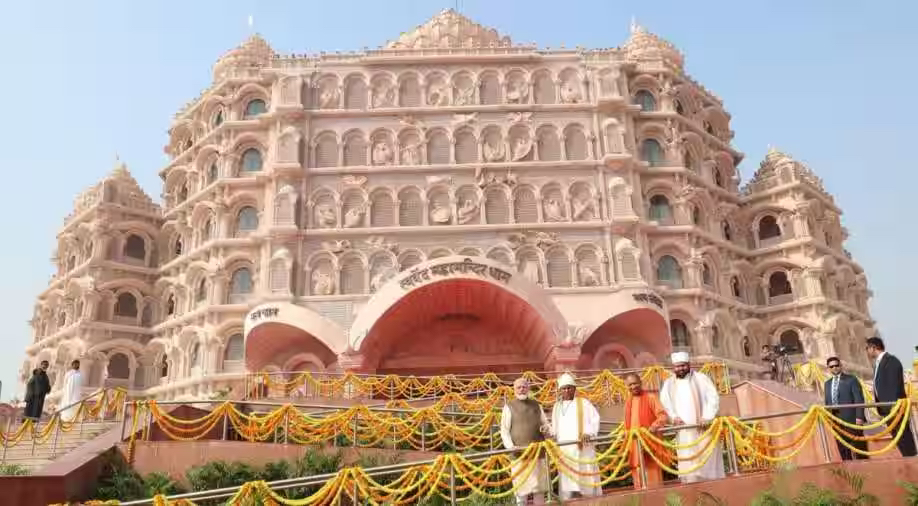
- 19 Dec 2023
Why is it in the News?
Prime Minister Narendra Modi inaugurated the world’s largest meditation centre, Swarved Mahamandir, in Varanasi on December 18.
About the Swarved Mahamandir:
- The Swarved Mahamandir stands as the world's largest meditation centre, accommodating 20,000 individuals in collective contemplation.
- Situated in Varanasi, Uttar Pradesh, this spiritual haven aspires to cast a luminous spiritual aura, enveloping the globe in a state of tranquil attentiveness.
- Named after the Swarved, a profound spiritual text penned by Sadguru Shri Sadafal Deoji Maharaj, the visionary behind Vihangam Yoga and an enduring yogi, the temple serves as a bastion for disseminating Swarveda teachings.
- Emphasizing Brahma Vidya, a profound body of knowledge, it guides spiritual seekers toward sustaining an unwavering equilibrium of peace and happiness.
- Architecturally, the Mahamandir is an imposing seven-floor superstructure, adorned with a captivating design featuring 125-petal lotus domes.
- Crafted from teakwood, the intricate carvings embellishing the ceiling and doors add to its allure.
- Pink sandstone envelops the temple walls, complemented by an enchanting garden featuring medicinal herbs.
- Imprinted on the Mahamandir's walls are verses from the Swarveda, serving as an enduring testament to the spiritual wisdom that resonates within its sacred confines.
What is Vihangam Yoga?
- Vihangam Yoga, an indigenous form of Yoga and meditation, was established by Sadguru Sadafal Deo Ji Maharaj in 1924.
- The nomenclature of this practice is derived from two foundational words: "Vihag," signifying bird, and "Yog," denoting union.
- The name encapsulates the profound concept of a bird ascending from the terrestrial realm, soaring high and unbounded in the sky.
- This symbolism mirrors the ultimate aim of Vihangam Yoga – the liberation of the soul from attachments to the material world, allowing it to recognize and embrace its innate, unshackled essence.
- Only through this liberation can an individual's consciousness seamlessly merge with the universal consciousness, often referred to as the Supreme Being, leading to a state of enduring tranquillity and bliss.
Telecommunications Bill, 2023: The changes it seeks in the telecom sector, why some have raised concerns (Indian Express)
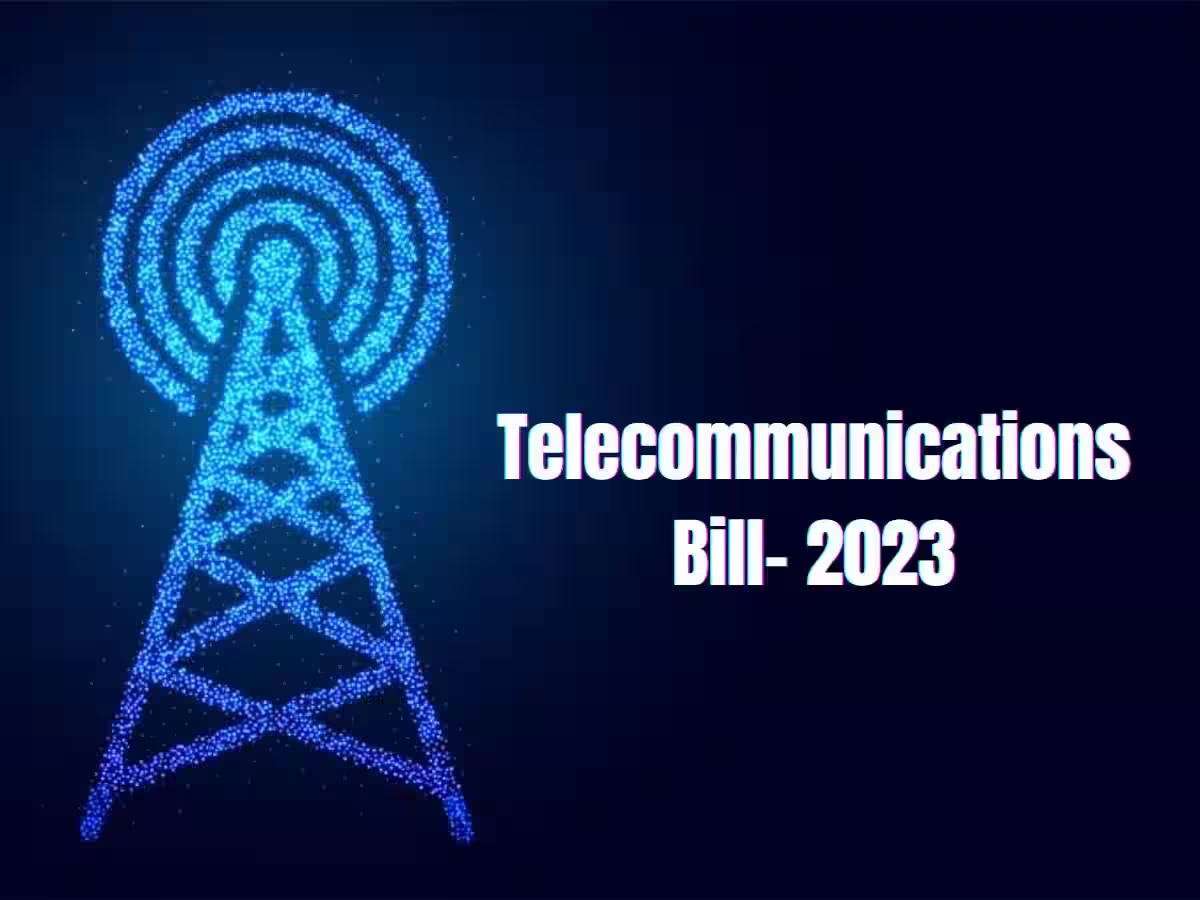
- 19 Dec 2023
Why is it in the News?
The Telecommunications Bill, 2023, was introduced in the Lok Sabha on Monday. The bill allows the government to take over, manage or suspend telecommunication services or a network over national security.
Key Features of the Telecommunications Bill, 2023
- Repeal of Existing Laws: The bill annuls the Indian Telegraph Act, 1885, the Indian Wireless Telegraphy Act, 1933, and the Telegraph Wires (Unlawful Possession) Act, 1950, while introducing amendments to the Telecom Regulatory Authority of India (TRAI) Act, 1997.
- Authorization for Telecom Activities: Central government approval is mandatory for telecommunication services, network establishment, operation, maintenance, expansion, or possession of radio equipment.
- Existing licenses remain valid for their granted period or five years if unspecified.
- Spectrum Assignment: Spectrum allocation, except for specific purposes, will be through auction.
- Exceptions include national security, disaster management, and services by state-owned entities.
- Interception and Search Powers: Messages may be intercepted, monitored, or blocked for public safety, emergencies, or specified grounds like state security and prevention of offences.
- Government's Extraordinary Powers: The government can take temporary possession of telecom infrastructure during public emergencies, with the authority to suspend telecom services.
- Authorized officers may search for unauthorized equipment.
- Standards Specification Authority: The central government can prescribe standards for telecom equipment, infrastructure, networks, and services.
- Right of Way for Telecom Infrastructure: Facility providers can seek a right of way over public or private property for telecom infrastructure on a non-discriminatory basis.
- User Protection Measures: The government may implement measures to protect users, including consent for specific messages, creation of Do Not Disturb registers, and a mechanism for reporting malware.
- TRAI Appointments and Experience Requirements: Amendments allow individuals with at least 30 years of professional experience to serve as TRAI chairperson and those with at least 25 years of membership.
- Digital Bharat Nidhi: The Universal Service Obligation Fund (USOF) is renamed Digital Bharat Nidhi, allowing its use for research and development (R&D).
- Adjudication Process: An adjudicating officer, of the rank of joint secretary and above, will handle inquiries and orders against civil offences.
- Appeals can be made to the Designated Appeals Committee and further to TDSAT.
- Offences and Penalties: The Bill outlines criminal and civil offences, imposing penalties and imprisonment for unauthorized telecom services, network access, and equipment possession.
- Civil penalties apply for breaches of authorization terms.
What are the Reasons behind the introduction of the Telecommunications Bill, of 2023?
- The telecommunications sector plays a pivotal role in fostering economic and social progress, serving as the conduit for digital services.
- Given its significance, the security of our nation relies substantially on the robustness of telecommunication networks.
- Hence, there is an imperative to establish a legal and regulatory structure that prioritizes the security and resilience of telecommunication networks, fostering a digitally inclusive trajectory for growth.
- The dynamic evolution of telecommunication, its patterns of use, and underlying technologies in recent years underscores the necessity for legislation that aligns with the evolving needs of our society.
Stable Auroral Arc (SAR) (New Indian Express)

- 09 Nov 2023
Why in the News?
In a rare phenomenon, researchers from the Indian Institute of Astrophysics (IIA) have recorded the auroral activity that is normally witnessed over the North Pole- at Hanle and Merak in Ladakh through the all-sky cameras recently.
What is Stable Auroral Arc (SAR)?
- An aurora is a glorious curtain of light that is usually seen at high latitudes like in the Scandinavian countries, and they are not expected to occur at lower latitudes.
- They occur due to the interaction between the Earth’s magnetosphere and the incoming solar wind that carries charged particles and magnetic fields.
- They are typically several hundred kilometers wide and can extend for thousands of kilometers.
- A Stable Auroral Arc (SAR) is red in colour as opposed to the usual green-blue curtains of light seen from high latitudes.
- It is a rare phenomenon and it was not exactly an aurora-like one witnessed from close to the North Pole.
- SAR arcs are typically subvisual, meaning that they cannot be seen with the naked eye.
- However, they can be detected using specialized instruments, such as photometers and spectrographs.
- It was observed in Ladakh during a strong G3-class geomagnetic storm and this event was registered in many parts of the world.
Mines Ministry to Launch National Geoscience Data Repository Portal To Foster Innovation in Exploration (PIB)
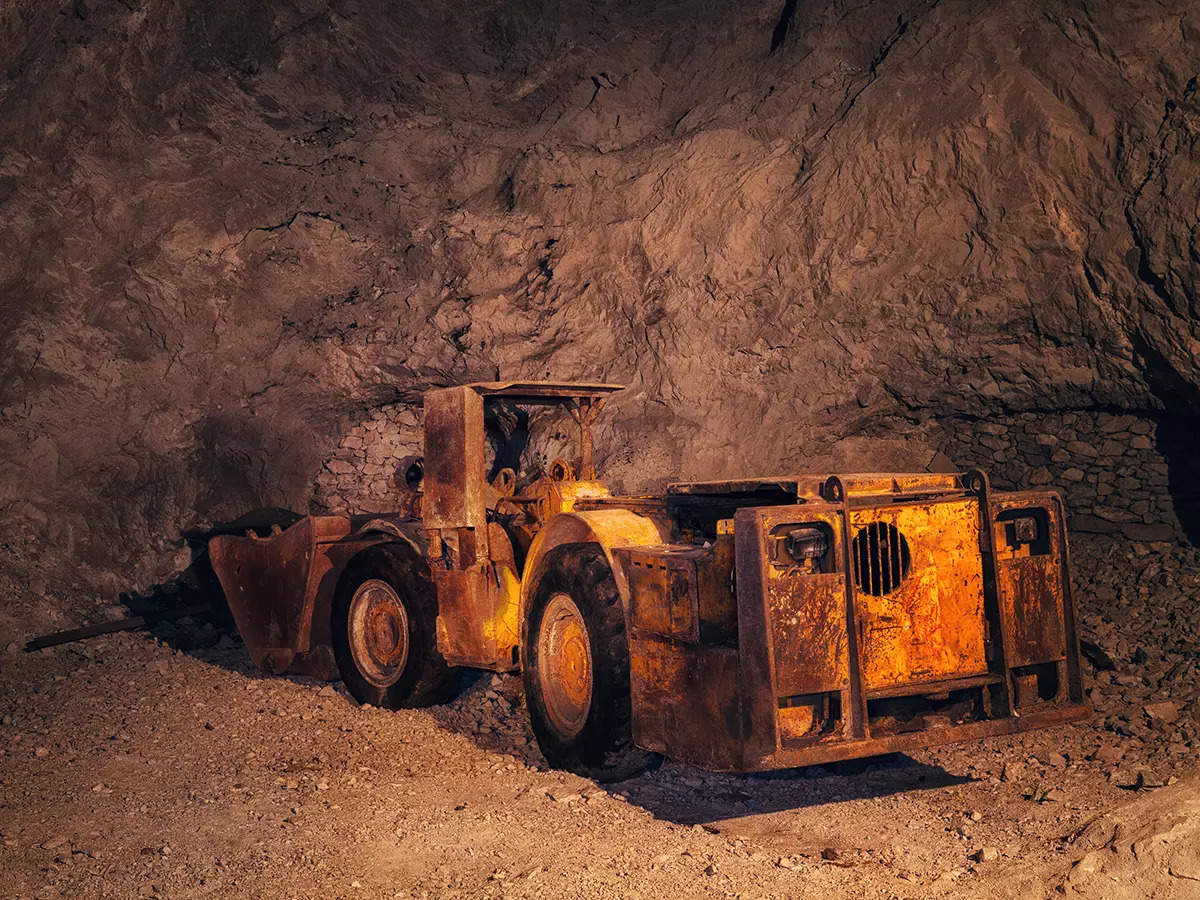
- 19 Dec 2023
Why is it in the News?
Ministry of Mines is to launch the National Geoscience Data Repository (NGDR) Portal on 19th December 2023 in a ceremony in New Delhi.
What is the National Geoscience Data Repository Portal?
- This extensive online platform facilitates the retrieval, exchange, and examination of geospatial information nationwide.
- Spearheaded by the Geological Survey of India (GSI) and the Bhaskaracharya Institute of Space Applications and Geoinformatics (BISAG-N), the NGDR initiative marks a notable advancement in democratizing crucial geoscience data.
- It empowers stakeholders in various industries and academia by providing unparalleled access to invaluable resources.
About the Geological Survey of India (GSI):
- The Geological Survey of India (GSI) originated in 1851 with the primary objective of identifying coal deposits for the Railways.
- Since its inception, GSI has transformed into a repository of geo-scientific information, achieving international recognition for its contributions.
- The organization is dedicated to creating and updating national geoscientific data, conducting mineral resource assessments, and providing impartial geological expertise crucial for policy decisions, commercial ventures, and socio-economic needs.
- GSI focuses on comprehensive documentation of geological processes, employing state-of-the-art techniques in geological, geophysical, and geochemical surveys.
- As an attached office of the Ministry of Mines, GSI operates from its headquarters in Kolkata, with six regional offices in Lucknow, Jaipur, Nagpur, Hyderabad, Shillong, and Kolkata, along with state unit offices across India.
About BISAG (N):
- Bhaskaracharya National Institute for Space Applications and Geo-informatics (BISAG-N) operates as an Autonomous Scientific Society registered under the Societies Registration Act, 1860, falling under the MeitY, Government of India.
- Its multifaceted mission encompasses technology development and management, research and development, fostering national and international collaboration, capacity building, and facilitating technology transfer and entrepreneurship development in the realm of geospatial technology.
- BISAG-N has played a pivotal role in implementing GIS and geospatial technologies for major ministries and nearly all states, integrating diverse technological domains such as geo-spatial science, information science systems, and mathematics science systems.
- The institute operates as a state agency under the Department of Science and Technology, Government of Gujarat, situated in Gandhinagar, Gujarat.
mRNA, easy to customise, is the next frontier for personalised medicine (The Hindu)
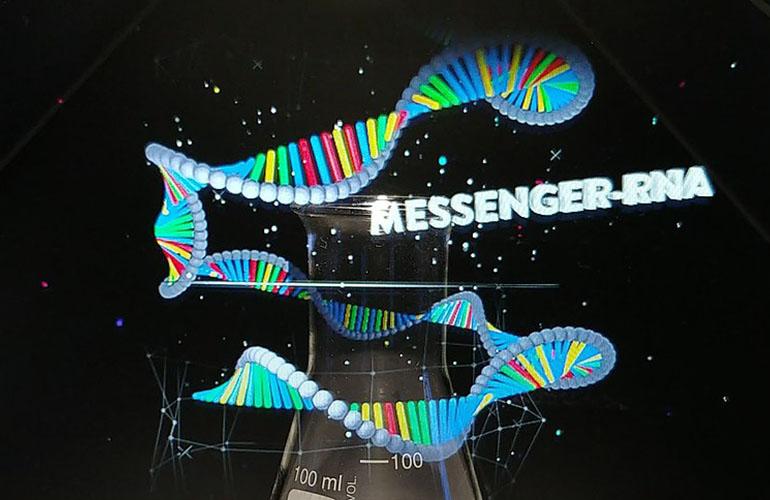
- 19 Dec 2023
Why is it in the News?
The therapeutic use of messenger RNA (mRNA) has fueled great hope to combat a wide range of incurable diseases.
What is mRNA?
- mRNA, or messenger RNA, represents a type of nucleic acid responsible for conveying genetic instructions.
- Within cells, mRNA serves as a messenger, transporting codes from the DNA located in the nucleus to the sites of protein synthesis in the cytoplasm, where ribosomes are situated.
- The genetic information in DNA undergoes transcription, or copying, into mRNA before proteins can be synthesized.
- Each mRNA molecule encodes information for a specific protein, with every sequence of three nitrogen-containing bases dictating the inclusion of a particular amino acid in the protein.
Advantages of mRNA-Based Medicine:
- Scalability: The production of mRNA in the laboratory is highly scalable, as the method for generating mRNA remains consistent across different types.
- This contrasts with traditional drugs, where each compound has distinct chemistry, requiring varied manufacturing methods.
- Patient-Centric: mRNA, being naturally degradable by cells when no longer needed, allows for flexible dosage adjustments to cater to changing patient requirements.
- Broad Therapeutic Potential: mRNA-based medicine holds promise for addressing a wide range of diseases rooted in cellular errors, such as the production of incorrect proteins, mutant protein versions, or insufficient normal protein levels.
- By delivering corrected mRNA to affected cells, scientists aim to facilitate the production of the correct proteins.
Prospects of mRNA-Based Medicine:
- Diverse Treatment Applications: The future of mRNA-based medicine extends to addressing conditions like heart disease, neurodegenerative diseases, and bone loss, among others.
- Enhanced Wound Healing: mRNA drugs exhibit the potential to stimulate the formation of new blood vessels.
- This capability is particularly beneficial for diabetic patients with compromised blood circulation, reducing the risk of amputation.
- Treatment for Rare Conditions: mRNA-based medicine holds promise in treating rare disorders like propionic acidaemia, characterized by insufficient levels of liver proteins crucial for preventing the accumulation of toxic by-products in the body, especially in children.
Way Forward
- The capacity to tailor and manufacture mRNA easily enhances its prospects as a potent and personalized therapy, offering the potential for reduced side effects and widespread applicability.
- Despite these advancements, mRNA-based therapeutics are in the early stages of development, facing challenges such as the short lifespan of mRNA in cells and limited protein production duration.
- Addressing these hurdles is crucial to optimizing mRNA effectiveness and minimizing the quantity of mRNA needed.
MoEFCC has launched the Indian Forest & Wood Certification Scheme to promote sustainable forest management and agroforestry practices across the country (Indian Express)
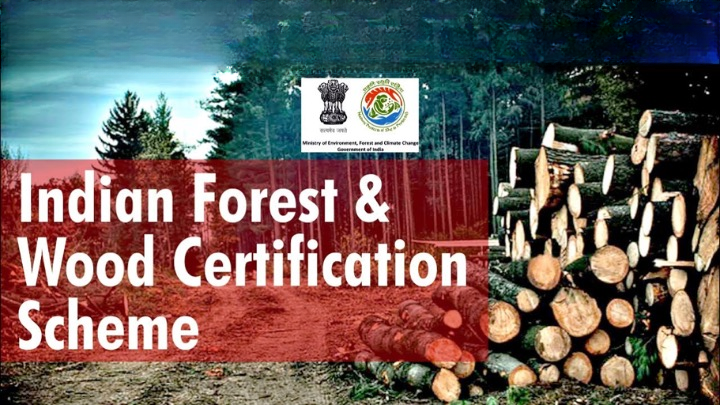
- 19 Dec 2023
Why is it in the News?
Amid rising international concerns about deforestation and illicit trade in timber, the government has launched its own “national” forest certification scheme to validate entities that adhere to sustainable practices in the management of forests and their products.
About the Indian Forest & Wood Certification Scheme (IFWCS):
- The Indian Forest & Wood Certification Scheme (IFWCS) serves as the national forest certification initiative, focusing on fostering sustainable forest management and the sustainable utilization of Trees outside Forests (TOF) across India.
- Voluntary Participation: The scheme provides a voluntary third-party certification mechanism to encourage agroforestry practices within the country.
- Alternatives to Foreign Certifications: IFWCS presents an indigenous alternative to foreign certification agencies that have been prevalent in the Indian market for the past two decades.
- Applicability: The certification applies nationwide, covering both forest areas and TOF plantations on government, private, agroforestry, and other lands.
- It encompasses both timber and non-timber forest produce (NTFP).
- Necessity: With major export markets like Europe and the United States imposing stricter rules on forest product imports due to deforestation concerns related to climate change, IFWCS can provide market incentives for entities practising responsible forest management.
- Significance: The scheme aims to enhance trust, transparency, and international acceptability of Indian forest-based products.
- It is especially beneficial for state forest departments, individual farmers, or Farmer Producer Organizations engaged in agroforestry.
- Compliance and Legal Status: While the certification may gain recognition from various regulatory authorities, it does not serve as legal advice on compliance with specific laws, regulations, or requirements.
- Foundation: Forest Management certification relies on the Indian Forest Management Standard, a crucial component of the National Working Plan Code 2023, introduced this year.
- The Indian Forest and Wood Certification Council, acting as a multi-stakeholder advisory body, will supervise the scheme.
- The council comprises members from esteemed institutions like the Indian Council of Forestry Research and Education, Forest Survey of India, and the Indian Institute of Forest Management, along with representatives from relevant ministries.
- Implementation: The Indian Institute of Forest Management in Bhopal will serve as the scheme's operating agency.
- Certification bodies conducting independent audits will be accredited by the National Accreditation Board for Certification Bodies under the Quality Council of India.
Management of Forests in India:
- The administration of forests in India aligns with individual working plans specific to each forest area.
- Recently, these plans have undergone revisions incorporating the newly formulated Indian Forest Management Standards.
- Comprising 8 criteria, 69 indicators, and 254 verifiers, these standards are obligatory for implementation across all forest divisions nationwide.
- While forest divisions are not compelled to obtain certification, adhering to these standards renders them eligible.
- The decision to pursue certification is contingent upon specific requirements and considerations.
India's Akash missile engages four targets at once at 25km, a global first (ET)
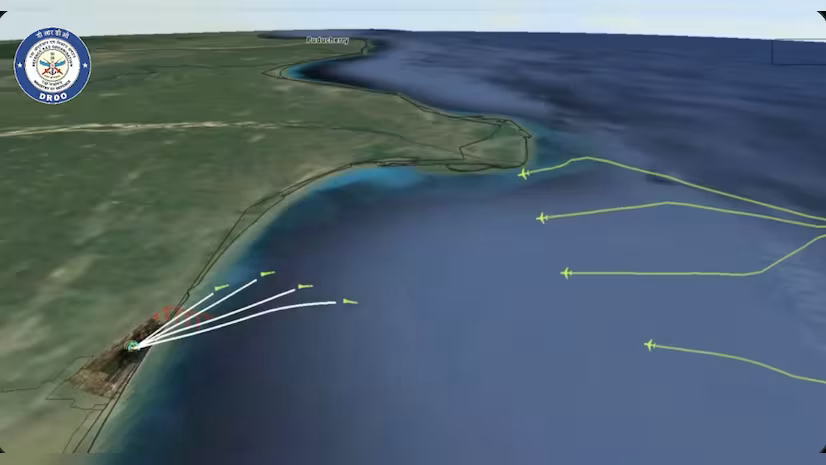
- 18 Dec 2023
Why is it in the News?
India demonstrated the capability of the Akash missile system to engage four aerial targets simultaneously at a range of 25 kilometres, the Defence Research and Development Organisation (DRDO) said on Sunday.
Context:
- During the recent Exercise Astrashakti 2023, a solitary unit of the Akash weapon system demonstrated its capability by effectively engaging and eliminating four unmanned targets simultaneously.
- This showcase positions India as the pioneer, being the first country to showcase the proficiency of engaging multiple targets at considerable distances concurrently through command guidance from a single firing unit.
About the Akash Surface-to-Air Missile (SAM) Defence System:
- The Akash Surface-to-Air Missile (SAM) Defence System is a Short-Range Surface-to-Air Missile (SRSAM) designed to safeguard vulnerable areas and points from airborne threats.
- Developed indigenously by the Defence Research and Development Organisation (DRDO), it boasts several notable features:
- Versatility: Capable of simultaneously engaging multiple targets and effectively neutralizing manoeuvring threats, including unmanned aerial vehicles, fighter aircraft, cruise missiles, and helicopter-launched missiles.
- Electronic Counter-Counter Measures (ECCM): Equipped with built-in ECCM features, enhancing its resilience against electronic countermeasures.
- Flexible Deployment: The entire system is configured for launch from both static and mobile platforms such as battle tanks and wheeled trucks, ensuring adaptable deployment options.
- Transportability: Road and rail transportable, with swift mobilization and deployment capabilities, facilitating rapid response scenarios.
- Range: Capable of engaging aerial targets at a distance of approximately 25 km.
- Altitude of Operation: Ranging from 100 meters up to 20 km.
- Weight: 710 kg.
- Guidance System: Command Guidance.
- Automation: Fully automatic with a quick response time from target detection to neutralization.
- Open-System Architecture: Designed with an open-system architecture, ensuring adaptability to current and future air defence environments.
What is ‘noma’, the latest addition to WHO’s list of neglected tropical diseases (DownToEarth)
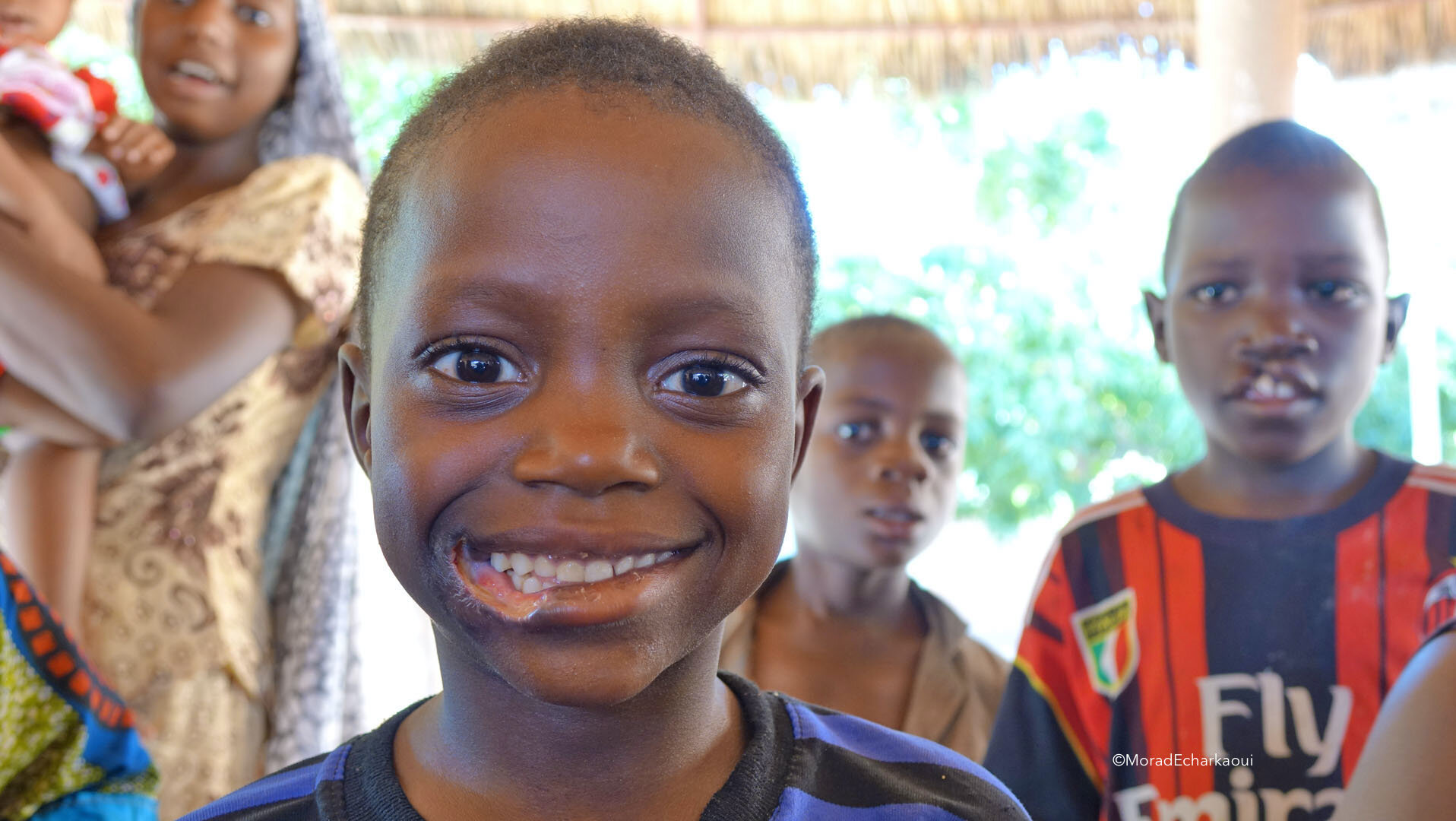
- 18 Dec 2023
Why is it in the News?
The World Health Organization (WHO) on December 15, 2023, added one of the world’s most under-recognised health challenges, noma, to its official list of neglected tropical diseases (NTD).
About the Noma disease:
- Noma is a severe gangrenous disease of the mouth and face with a mortality rate of approximately 90 per cent.
- It is also known as cancrum oris or gangrenous stomatitis and is often associated with extreme poverty, malnutrition and poor access to sanitation and oral hygiene.
- The name of the disease comes from the Greek word “nom?”, meaning “to devour”, as noma eats away facial tissue and bones if not treated early.
- Noma mainly affects children aged 2-6 years old and is found most commonly among those living in poor communities.
- The illness’s ‘hidden’ or neglected nature is most likely due to the fact that it affects the world’s most marginalised children.
- Noma is associated with a number of risk factors, including poor oral hygiene, malnutrition, weakened immune systems, infections, and extreme poverty.
- While the disease is not contagious, it prefers to attack when the body’s defences are weak.
- The NTD often starts as an ulcer on the mucous membrane lining, commonly after a bout of measles or other diseases, stated another 2003 study.
- “It quickly develops into a massive necrosis, moving from the inside outward, often involving major portions of the face.
- Treatment: “Early treatment with antibiotics, rehydration, correction of electrolytic imbalances, and administering nutritional supplements will halt the disease.
- The patients who survive face many consequences, like significant facial disfigurement, spasms of the jaw muscles, oral incontinence and speech problems.
- The disease is also called the ‘face of poverty’, as effective drugs like sulfonamides and penicillin and adequate surgical treatment for the effects remain inaccessible for many due to extreme poverty.
- “The recognition of noma as an NTD aims to amplify global awareness, catalyse research, stimulate funding, and boost efforts to control the disease through multisectoral and multi-pronged approaches.
Surat Diamond Bourse to create 150,000 jobs! Modi is confident ‘world’s largest office building’ will be a boon for artisans and businessmen (Financial Express)

- 18 Dec 2023
Why is it in the News?
In the inauguration ceremony of the Surat diamond bourse in Gujarat, Prime Minister Narendra Modi revealed plans for the creation of 150,000 new jobs, emphasising the bourse’s role as a “one-stop shop” for artisans and businessmen.
About Surat Diamond Bourse:
- Established in February 2015 by the former Chief Minister of Gujarat, Smt. Anandiben Patel, the Surat Diamond Bourse (SDB) is a prominent diamond trade centre situated in DREAM (Diamond Research and Mercantile) city, Surat, Gujarat.
- Recognized as the "diamond city" due to its diamond industry, which processes 85 to 90% of the world's rough diamonds, the SDB stands as the world's largest diamond trading hub, spanning an expansive floor space of 660,000 square meters and surpassing The Pentagon as the largest office building globally.
- Themed around the 'panch tatva,' symbolizing the five elements of nature – air, water, fire, earth, and sky, the SDB is designed with thematic landscaping.
- As a global centre for both rough and polished diamond and jewellery trading, it unifies various facets of the diamond industry, including cutting, polishing, and trading activities, within its vast expanse.
- The Bourse features a state-of-the-art 'Customs Clearance House' for Import-Export, a Jewelry mall for retail jewellery business, and facilities for International Banking and Safe Vaults.
Importance of the SDB Project:
- The Surat Diamond Bourse (SDB) is set to accommodate a diverse range of diamond-related enterprises, encompassing the sale of both rough and polished diamonds, diamond manufacturing machinery, diamond planning software, diamond certificate firms, lab-grown diamonds, and more.
- Anticipated to be a major contributor to employment, the SDB is poised to generate substantial job opportunities.
- With an expected direct employment impact on over 1.5 lakh individuals across various roles within the diamond industry, it aims to bolster economic activity and livelihoods.
- Acknowledging its commitment to environmental responsibility, the complex has earned pre-certification as a green building by the Indian Green Building Council (IGBC).
- This recognition is a testament to the SDB's implementation of eco-friendly and sustainable practices in its operations.
What is DREAM City?
- DREAM City, short for Diamond Research and Mercantile City, is an emerging business district located in Surat.
- Encompassing 810 hectares (2,000 acres) of land near Khajod, it follows the model of the Gujarat International Finance Tec (GIFT) City and Dholera Smart City near Ahmedabad.
- Envisioned as a comprehensive urban development, DREAM City is slated to feature office spaces, residential areas, and associated amenities.
- The project is under the purview of a special-purpose vehicle established by the Government of Gujarat.
- With an anticipated opening in 2030, DREAM City is poised to become Gujarat's third smart city, aligning with the state's commitment to fostering modern and sustainable urban environments.
Scientists find hydrogen cyanide, a key molecule for life formation, in Saturn’s icy moon Enceladus (Sci News)
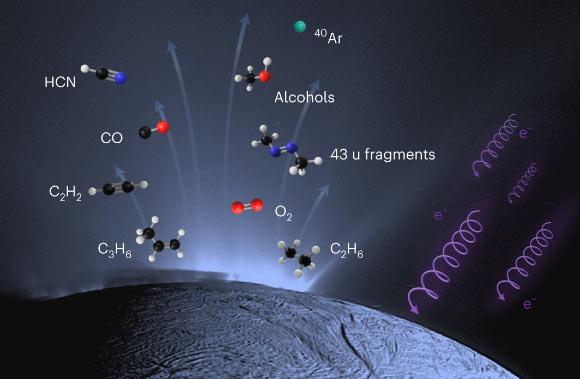
- 18 Dec 2023
Why is it in the News?
Recently, planetary scientists have detected several compounds of strong importance to the habitability of Saturn’s icy moon Enceladus, including hydrogen cyanide, acetylene, propylene and ethane, using data from NASA’s Cassini mission.
What is Enceladus?
- Enceladus is the sixth-largest icy moon of Saturn. It has a white, streaky surface made of water ice.
- Beneath this frozen crust lies a warmer, salty ocean that covers the whole moon.
- This circular moon is just about 500 km wide, with a surface temperature of -200°C.
- But its interiors host several sources of energy and heat.
- Enceladus is tugged and pulled in all directions by Saturn’s gravity and the gravity of other more massive moons, thus creating heat in its interior.
- Its rocky core may also be undergoing radioactive decay and chemical reactions that generate heat.
- Moreover, it is also an active source of water volcanism, where giant plumes of water, ice, dust, and gases are ejected into space like volcanic explosions.
- The material from the plumes replenishes one of the rings of Saturn as well, as the icy particles that make up the rings slowly drift inwards and get pulled into Saturn.
- The presence of a global saltwater ocean with nutrients and a heat source suggests a suitable aquatic environment for life.
- However, no life has been found on Enceladus or anywhere else beyond Earth.
About Hydrogen cyanide:
- Hydrogen cyanide is a chemical compound with the formula HCN and structural formula H−C≡N.
- It presents itself as a colourless or pale-blue liquid or gas, characterized by a bitter, almond-like fragrance.
- Alternatively referred to as hydrocyanic acid or HCN, this substance has the potential to disrupt the body's oxygen utilization, posing risks to the brain, heart, blood vessels, and lungs.
- While Hydrogen cyanide boasts excellent solvent properties for numerous salts, its utilization as a solvent is limited due to its inherent toxicity.
- In various industrial settings, it finds application in tasks such as fumigation, electroplating, mining, chemical synthesis, and the manufacturing of synthetic fibres, plastics, dyes, and pesticides.
How Indian states fare on logistics: What the Centre’s latest survey says (Indian Express)

- 18 Dec 2023
Why is it in the News?
The Logistics Ease Across Different States (LEADS) perception survey, released by the Union Ministry of Commerce and Industry, flags some challenges in logistics and states performance on a regional basis.
Key highlights of the Report:
- Only five states namely Gujarat, Tamil Nadu, Karnataka, Maharashtra and Telangana continue to make up 70 per cent of exports. Over the years this has caused a widening gap in income and job generation between the landlocked states and coastal states.
- Performance of Landlocked States: Bihar, Himachal Pradesh, Jharkhand, and Chhattisgarh have received low perception scores on these counts while user satisfaction in Telangana, Uttar Pradesh, and Punjab improved.
- Notably, Jharkhand saw below-average scores across all indicators, encompassing infrastructure, services, and operating and regulatory categories.
- Performance of North-East Group: In Manipur, user satisfaction levels for the state are generally lower than the average of the North-East Group for all indicators across pillars.
- The data indicated relatively high stress in the ‘easy of entry’ category.
- While Assam performed better than average on most counts, the user performance assessment was also below the average of North-East Group in the case of Meghalaya.
- Odisha, West Bengal Lag Among Coastal States: Indian coastal states including Andhra Pradesh, Goa, Gujarat, Karnataka, Kerala, Maharashtra, Odisha, Tamil Nadu and West Bengal account for 75 per cent of total exports from the country and have fared well in logistics historically.
- Gujarat accounts for 33% followed by Maharashtra with 16% and Tamil Nadu with 9% share.
- However, the survey showed that Goa, Odisha and West Bengal continue to perform below the average among coastal states.
- In the case of Odisha, the survey said that there has been an improvement in the overall perception of the state’s logistics ecosystem since 2019 but despite this, the indicator averages for this year have remained below the Coastal Group average.
What is Logistics Ease Across Different States (LEADS)?
- Initiated in 2018 by the Department for Promotion of Industry and Internal Trade (DPIIT), Ministry of Commerce and Industry, LEADS draws inspiration from the World Bank's Logistics Performance Index (LPI).
- Unlike the LPI, which relies solely on perception-based surveys, LEADS incorporates both perception and objectivity, thereby enhancing the robustness and comprehensiveness of its evaluation.
- LEADS focuses on three pivotal pillars:
- Logistics Infrastructure
- Logistics Services, and
- Operating and Regulatory Environment.
- The recently released 5th edition, LEADS 2023, illuminates the evolving performance of states and union territories across these pillars.
- It provides valuable insights into the enhancement of logistics performance at the State/UT level, emphasizing an augmented stakeholder perception and the impact of various reforms.
- This report not only signals a positive transformation in the performance of states but also empowers State/UT Governments with region-specific insights, facilitating informed decision-making and comprehensive growth.
Importance of the LEADS Initiative:
- The LEADS report serves as a catalyst in fostering healthy competition among States/UTs, driving improvements in logistics performance.
- Notably, 23 States/UTs have aligned their State Logistics Policies with the National Logistics Policy, while 16 have accorded industry status to logistics, collectively contributing to the elevation of India's global positioning in the logistics ecosystem.
- This initiative significantly enhances the overall competitiveness of India's logistics sector, as evidenced by the country's ascent by six places to the 38th position in the 2023 Logistics Performance Index.
- Integral to this success are digital reforms like PM GatiShakti, Logistics Data Bank, Unified Logistics Interface Platform (ULIP), and GST, which have propelled India's improved global ranking.
- Developed collaboratively and through a consultative approach, the LEADS report introduces objectivity in assessing both infrastructure development and process-related reforms.
Saint Lucia’s Tax Inspectors without Borders (TIWB) programme launched in partnership with India (ET)
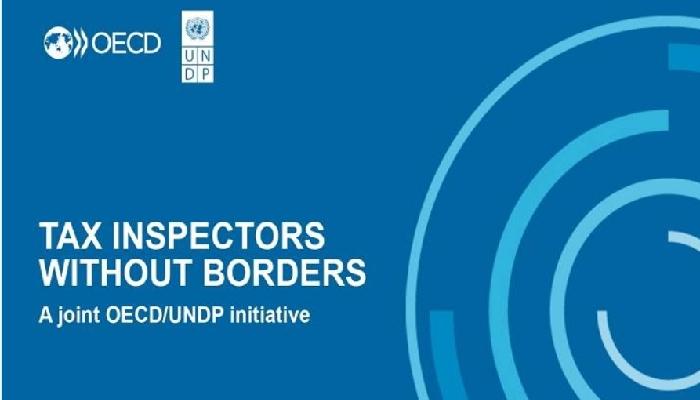
- 16 Dec 2023
Why is it in the News?
India will help Saint Lucia in strengthening its tax administration by transferring technical knowledge and skills to its tax administration, and sharing best practices under the ‘Tax Inspectors Without Borders (TIWB) programme’.
Key Highlights:
- India has been chosen as the Partner Administration and will provide Tax Experts for this programme.
- This programme is expected to be of 12-18 months’ duration in which India, in collaboration with the TIWB Secretariat and support of the UNDP Country Office, Barbados and the Eastern Caribbean, aims to aid Saint Lucia in strengthening its tax administration by transferring technical knowledge and skills to its tax administration, and through sharing of best practices.
- The focus of the programme will be on the effective use of automatic exchange of information under the Common Reporting Standard (CRS) framework.
What is Tax Inspectors without Borders programme?
- Tax Inspectors Without Borders (TIWB) is a joint initiative of the Organisation for Economic Co-operation and Development (OECD) and the United Nations Development Programme (UNDP).
- It is designed to support developing countries to build tax audit capacity.
- TIWB facilitates well-targeted, specialised tax audit assistance in developing countries around the world.
- Under TIWB, tax audit experts work alongside local officials of developing country tax administrations on tax audit and tax audit-related issues.
- TIWB aims to transfer technical know-how and skills to developing countries’ tax auditors, as well as share general audit practices.
- The host administrations of developing countries are the lead partners in TIWB programmes, clearly specifying their needs and scope of work.
- A dedicated central unit (TIWB Secretariat) jointly managed by OECD and UNDP operates as a clearing house to match the demand for auditing assistance with appropriate expertise.
- TIWB is a capacity-building programme.
State Bank of India (SBI) has raised its marginal cost of funds-based lending rate (MCLR) by up to 10 basis points for selected tenures (Financial Express)
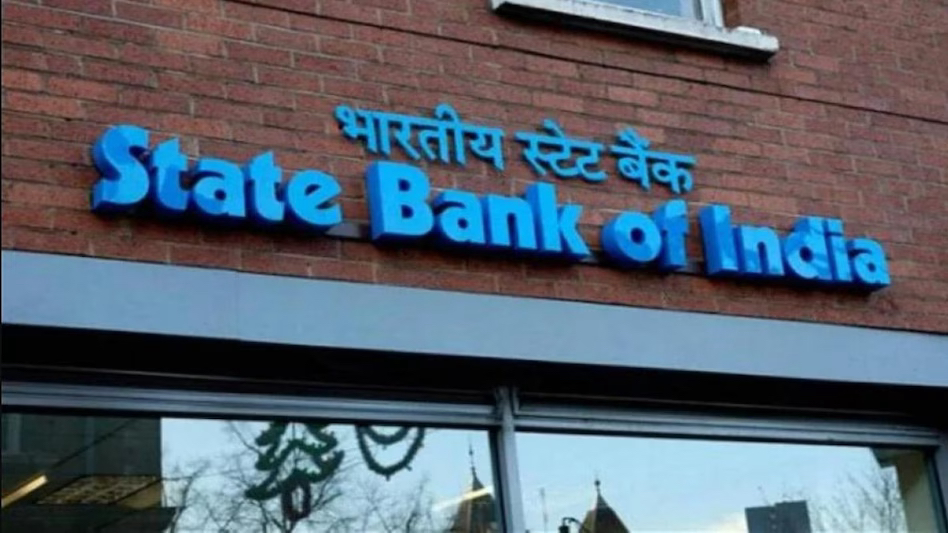
- 16 Dec 2023
Why is it in the News?
State Bank of India (SBI) on Friday hiked its marginal cost of funds-based lending rate (MCLR) on various tenures by 5-10 basis points (bps), a move that could make consumer loans, such as auto or home loans, more expensive for borrowers.
What is the Marginal Cost of Funds Based Lending Rate (MCLR)?
- The MCLR, or Marginal Cost of Funds Based Lending Rate, represents the minimum lending rate below which a bank is not authorized to lend.
- This mechanism aims to facilitate the calculation of the minimum interest rate applicable to various types of loans offered by banks.
- Introduced by the Reserve Bank of India (RBI) on April 1, 2016, the MCLR methodology serves to improve the effectiveness of monetary policy transmission and enhance transparency in the interest rate-setting process, replacing the earlier base rate structure established in July 2010.
- Calculation of MCLR: MCLR is internally determined by the bank, considering the remaining period for the loan repayment. This rate is closely tied to actual deposit rates and is calculated based on four key components:
- The marginal cost of funds
- Negative carry-on account of the cash reserve ratio
- Operating costs
- Tenor premium
- Under the MCLR framework, banks have the flexibility to offer loans at fixed or floating interest rates across all categories.
- The actual lending rates for various loan categories and tenors are determined by adding the components of spread to the MCLR.
- Consequently, the bank is restricted from lending at a rate lower than the MCLR for a specific maturity concerning all loans linked to that benchmark.
- Banks review and publish MCLRs for different maturities on a monthly basis.
- Certain loan rates, such as those for fixed-rate loans with tenors exceeding three years and special loan schemes offered by the government, remain unaffected by MCLR fluctuations.
Difference Between MCLR and Base Rate:
MCLR stands as a more evolved iteration of the base rate, presenting several distinctions between the two:
- Origin and Regulation: The base rate is the RBI-set minimum interest rate, and financial institutions cannot lend below this rate.
- MCLR, on the other hand, is an internal benchmarking system used by financial institutions, allowing them to set lending rates based on a predetermined spread.
- Cost Calculation: The base rate relies on the average cost of funds.
- MCLR is rooted in the marginal or incremental cost of money, providing a more dynamic reflection of the current cost scenario.
- Impact of RBI's Repo Rate: The base rate remains unaffected by changes in the RBI's repo rate.
- MCLR, however, is directly influenced by revisions in the repo rate, adjusting accordingly.
- Consideration Factors: The base rate typically considers the minimum rate of return or profit margin.
- In contrast, when determining the MCLR, factors such as the tenor premium are taken into account, resulting in a more nuanced rate-setting process.
‘Sacrifice forever etched in our hearts’: PM Modi, leaders across parties pay tributes on Vijay Diwas (Indian Express)
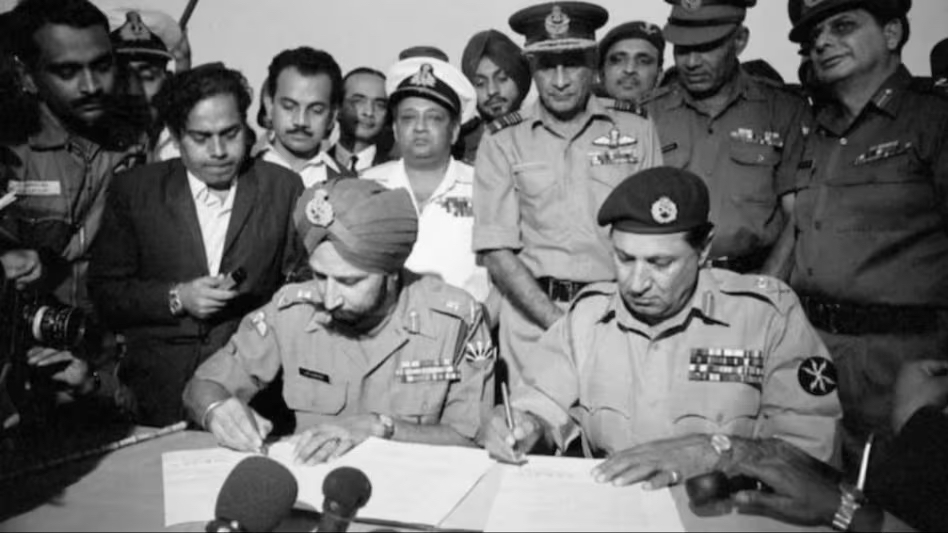
- 16 Dec 2023
Why is it in the News?
Leaders across the political lines paid tributes to the soldiers who fought in the 1971 war, on the occasion of 52nd Vijay Diwas on Saturday.
About Vijay Diwas:
- Vijay Diwas, observed on December 16 annually, is a commemoration honouring the triumph of the Indian armed forces over Pakistan in the 1971 war and paying tribute to the soldiers who made the ultimate sacrifice for their country.
- This day is also recognized in Bangladesh as 'Bijoy Dibos' or Victory Day, symbolizing the nation's formal independence from Pakistan.
Historical Background:
- The roots of the 1971 war lay in the genocide perpetrated by the oppressive Pakistani military regime, led by General Yahya Khan, against the people of East Pakistan.
- The conflict emerged following the victory of the Sheikh Mujibur Rahman-led Awami League in the 1970 elections.
- Post-elections, the Pakistani military used force to manipulate the results, resulting in a mass exodus from East Pakistan.
- India intervened during this critical period, with then-Prime Minister Indira Gandhi offering refuge to those fleeing from the other side of the border.
- Tensions escalated on December 3, 1971, when Pakistan initiated air strikes on 11 Indian airbases.
- In response, Indira Gandhi instructed India's Army Chief, General Sam Manekshaw, to launch a full-scale war against Pakistan.
- India supported Bangladesh nationalist groups and executed 'Operation Trident,' led by the Indian Navy, to target Karachi Port.
- After a 13-day battle, India achieved a decisive victory on December 16, 1971, leading to the establishment of Bangladesh from the former East Pakistan.
- On this momentous day, General Amir Abdullah Khan Niazi of Pakistan signed the Instrument of Surrender, capitulating with 93,000 Pakistani soldiers before the Indian Army and the Mukti Bahini of Bangladesh, marking the most substantial military surrender post-World War II.
How the hottest summer ever affected the Arctic: 5 things you need to know (Indian Express)
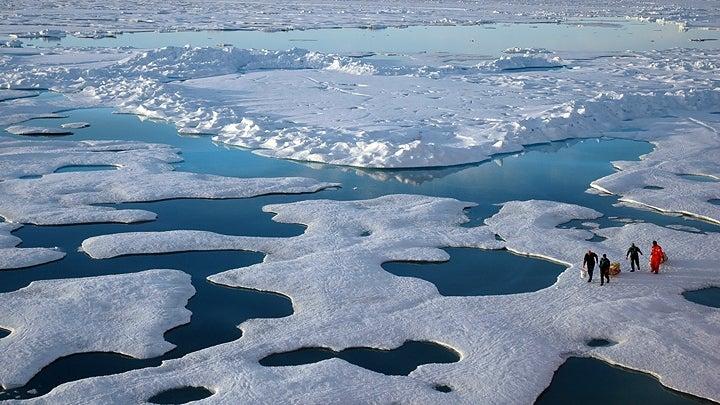
- 16 Dec 2023
Why is it in the News?
Rising temperatures in the Arctic have led to unprecedented wildfires that forced communities to evacuate, a decline in sea ice extent, devastating floods, food insecurity, and a rise in sea level.
Highlights from the Arctic Report Card 2023:
- The period from October 2022 to September 2023 ranked as the sixth-warmest year in the Arctic since the initiation of record-keeping in 1900.
- Notably, this timeframe aligns with the Arctic monitoring year, spanning from October to September to cover the region's cold season.
- This marks the 14th consecutive year wherein Arctic temperatures surpassed the average recorded between 1991 and 2020.
- The elevated temperatures observed in the northern polar region had significant consequences, including unprecedented wildfires necessitating community evacuations, a reduction in sea ice coverage, severe floods, concerns about food security, and an elevation in sea levels.
The most severe consequences of the soaring temperatures in the Arctic:
- Thawing of Subsea permafrost: Subsea permafrost is essentially frozen soil beneath the seabed that contains organic matter.
- While it has been gradually thawing for thousands of years, warmer ocean temperatures are accelerating this process.
- When subsea permafrost thaws, the organic matter it contains decays and releases methane and carbon dioxide – greenhouse gases that contribute to global warming and worsen ocean acidification.
- Food insecurity: Due to the impact of climate change on freshwater bodies and marine ecosystems, Western Alaska recorded another year of extremely low numbers of Chinook and chum salmon. The size of adult salmon has also decreased.
- It led to fishery closures, worsened user conflicts, and had profound cultural and food security impacts in Indigenous communities that have been tied to salmon for millennia.
- Interestingly, while the population of Chinook and chum salmon declined, sockeye salmon increased in Western Alaska.
- According to scientists, the diverging impacts are affecting Indigenous communities that depend on the salmon for food, and challenging fishery managers as the different species respond in unique ways to the warming climate.
- Raging wildfires: Canada with 40% of its land mass is considered Arctic and Northern was among the worst affected regions when it comes to wildfires.
- Canada witnessed its worst wildfire season on record with fires burning more than 10 million acres in the Northwest Territories.
- This happened as high temperatures dried up vegetation and soil, coupled with below-average rainfall, creating perfect conditions for wildfires.
- Canada witnessed its worst wildfire season on record with fires burning more than 10 million acres in the Northwest Territories.
- Severe flooding: Rising temperatures have led to dramatic thinning of the Mendenhall Glacier, located in Alaska, over the past 20 years.
- As a result, over the years, the meltaway water has annually caused floods in the region.
- One such disaster took place in August 2023, when a glacial lake on a tributary of the Mendenhall Glacier burst through its ice dam.
- It caused unprecedented flooding and severe property damage” in Alaska’s Juneau.
- Greenland ice sheet melting: The highest point on Greenland’s ice sheet experienced melting for only the fifth time in the 34-year record.
- Not only this, the ice sheet continued to lose mass despite above-average winter snow accumulation.
- Between August 2022 and September 2023, it lost roughly 350 trillion pounds of mass.
- Notably, Greenland’s ice sheet melting is the second-largest contributor to sea-level rise.
India joins the elite club of countries to have mastered the controls for flying wing technology in tailless configuration (Indian Express)
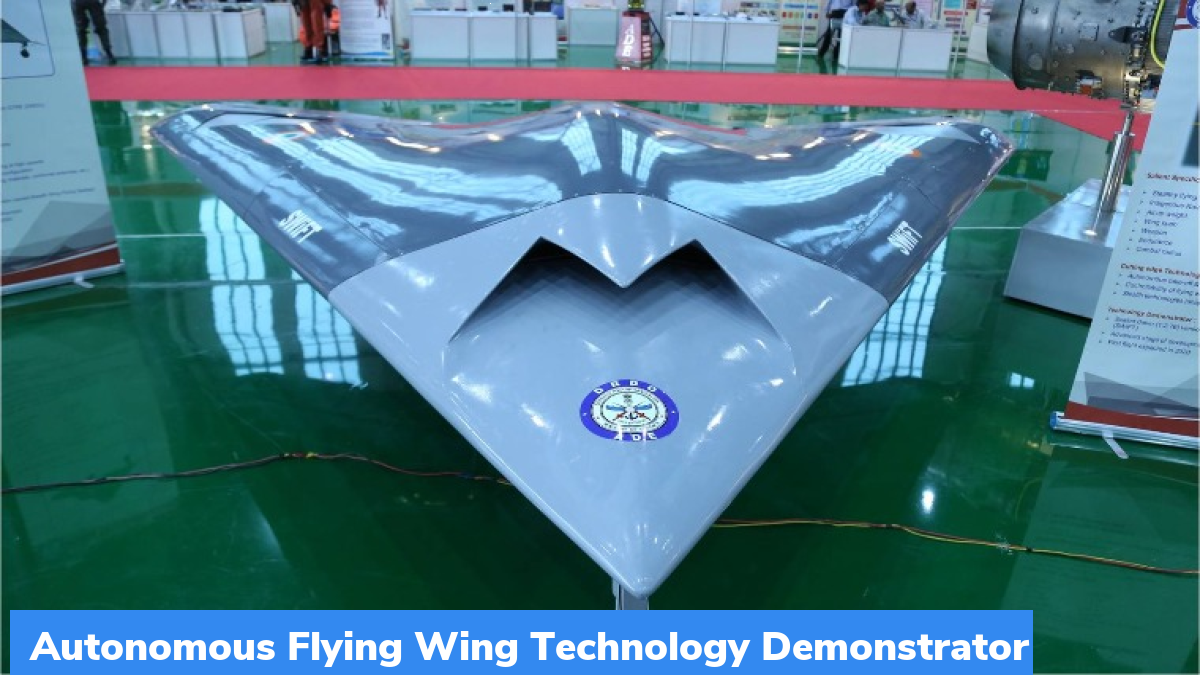
- 16 Dec 2023
Why is it in the News?
Recently Defence Research and Development Organisation (DRDO) successfully carried out a flight trial of the Autonomous Flying Wing Technology Demonstrator, an indigenous high-speed flying-wing Unmanned Aerial Vehicle (UAV) from the Aeronautical Test Range, Chitradurga in Karnataka.
About the Flying Wing Technology Demonstrator:
- The Flying Wing Technology Demonstrator is a domestically developed high-speed flying-wing Unmanned Aerial Vehicle (UAV) crafted by the Defence Research and Development Organisation (DRDO)’s Aeronautical Development Establishment.
- Its inaugural flight took place in July 2022, marking significant progress in the development of robust aerodynamic and control systems, real-time integration, hardware-in-loop simulation, and an advanced Ground Control Station.
- The project team successfully optimized avionic systems, integration processes, and flight operations, culminating in the seventh and final flight in the ultimate configuration.
- Constructed with a complex arrowhead wing platform, the UAV prototype utilizes a lightweight carbon prepreg composite material developed indigenously.
- A noteworthy feature is the autonomous landing capability, eliminating the need for ground radars, infrastructure, or a pilot.
- This unique capability demonstration allows take-off and landing from any runway with surveyed coordinates.
- This technology demonstrator has been developed for India's secretive stealth combat drone called Ghatak.
- The successful flight in a tailless configuration has propelled India into the prestigious group of nations that have perfected the controls for the Flying wing configuration
Indian Joins Elite Club:
- With this flight in the tailless configuration, India has joined the elite club of countries to have mastered the controls for the flying wing technology.
- These flight tests led to achievements in the development of robust aerodynamic and control systems; integrated real-time and hardware-in-loop simulation, and a state-of-the-art Ground Control Station, informed the DRDO.
Aatmanirbharta
- The DRDO team had optimised the avionic systems, integration and flight operations towards the successful seventh flight in the final configuration.
- The aircraft prototype, with a complex arrowhead wing platform, is designed and manufactured with lightweight carbon prepreg composite material developed indigenously.
- Also, the composite structure, impregnated with fibre interrogators for health monitoring, is a showcase of ‘Aatmanirbharta’ in aerospace technology.
'Pralay' Missile (The Hindu)
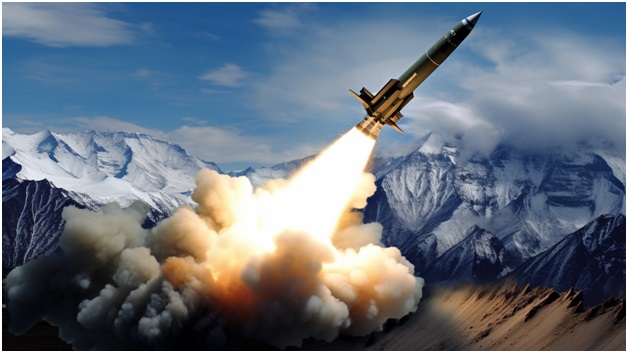
- 08 Nov 2023
Why in the News?
India on November 7 successfully test-fired its surface-to-surface short-range ballistic missile (SRBM) 'Pralay' from the Abdul Kalam Island off the Odisha coast.
About the Pralay missile:
- The Pralay missile is a short-range ballistic missile developed by India’s Defense Research and Development Organization (DRDO).
- It is similar in design and functionality to Russia’s Iskander-M quasi-ballistic missile.
- With a range that can vary from 150-500 km, the Pralay is equipped with a 500 kg payload that gives it a reach of 400 km.
- One of the key features of the Pralay missile is its ability to switch from a ballistic to a flat trajectory after launch.
- This quasi-ballistic trajectory, combined with high speeds and terminal maneuvering capabilities, makes it incredibly difficult for adversary air defense systems to intercept.
- The Pralay missile is a land mobile quick reaction system, launched from storage and transportation canisters and housed in either a 12×12 or an 8×8 launcher configuration.
- Furthermore, the missile’s jet vane system allows for evasive maneuvers in the terminal phase of flight, and it is even speculated that the Pralay has the capability to release decoys, adding an additional layer of defense.
- Its indigenously developed Fused Silica Radar-dome (RADOME) further enhances its radar transparency, making it even more challenging for enemy radars to detect.
- With the Pralay missile, India is reaffirming its commitment to developing and deploying advanced defense systems that can effectively counter adversary air defense systems.
- In an era where stealth technology is being challenged, the Pralay missile presents a formidable solution for striking targets deep behind enemy lines with minimal risk.
Treaty of Conventional Armed Forces in Europe (CFE) (Indian Express)
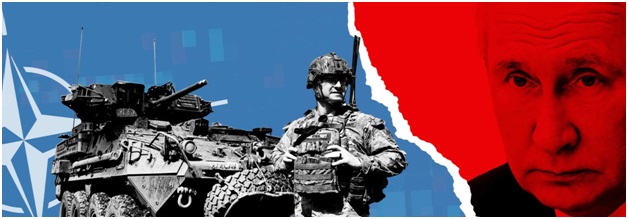
- 08 Nov 2023
Why in the News?
NATO on Tuesday announced the formal suspension of a key Cold War-era security treaty in response to Russia’s pullout from the deal.
About Treaty of Conventional Armed Forces in Europe (CFE):
- During the final years of the Cold War, negotiators signed the CFE, a treaty that placed restrictions on the deployment of military equipment to maintain a military balance between the North Atlantic Treaty Organization (NATO) and the then-Warsaw Pact countries.
- The treaty's purpose was to prevent the rapid build-up of forces that could be used in a swift assault.
- On November 19, 1990, twenty-two member states from both NATO and the Warsaw Pact came together in Paris to sign the agreement, a year after the fall of the Berlin Wall.
- The CFE finally entered into force on November 9, 1992, following the disintegration of the Warsaw Pact.
- The Treaty set specific limits on the number of battle tanks, armored combat vehicles, artillery pieces, combat aircraft, and attack helicopters that NATO and Warsaw Pact states could have on their respective territories.
- To meet these limits, CFE state parties destroyed over 50,000 weapons systems over subsequent years.
- These actions were monitored through a compliance mechanism that involved information sharing and reciprocal inspections.
- Furthermore, the treaty's scope was expanded to cover troop numbers in a 1992 follow-up agreement known as the CFE-1A.
- This arrangement arranged limits on military personnel levels.
- In 1999, during the Istanbul summit of the Organization for Security and Co-operation in Europe (OSCE), CFE Treaty partners reached an agreement on an updated and modified arrangement known as the Adapted CFE Treaty.
- One significant change was that limitations on conventional weapon systems were no longer linked to two military blocs but to the territorial borders of individual states.
- However, Russia suspended its participation in the treaty in 2007 and ceased active participation in 2015.
Krishi 24/7 7 (The Hindu Business Line)
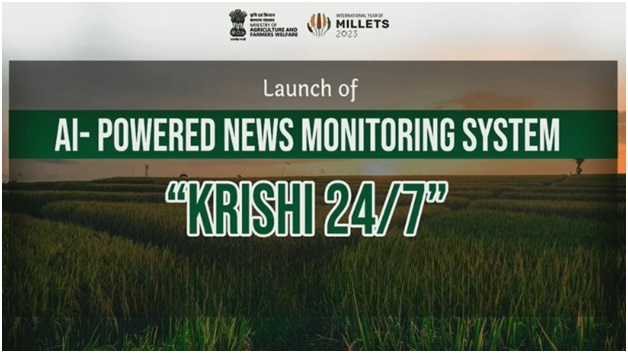
- 08 Nov 2023
Why in the News?
Recently, the Union Agriculture Ministry partnered with the Wadhwani Institute for Artificial Intelligence (Wadhwani AI) to create a solution known as Krishi 24/7.
About Krishi 24/7:
- Krishi 24/7 is a groundbreaking AI-powered solution developed with support from Google.org, designed for automated monitoring and analysis of agricultural news.
- Key Features:
- This tool scans news articles in various languages and translates them into English for easy access.
- It extracts crucial information from news articles, including headlines, crop details, event types, dates, locations, severity, summaries, and source links.
- This ensures that the ministry receives timely updates on relevant events found on the internet.
- Significance:
- Krishi 24/7 addresses the vital need for an efficient system to identify and manage agricultural news articles.
- This aids in making timely decisions.
- It serves the Department of Agriculture and Farmers Welfare (DA&FW) by identifying pertinent news, delivering timely alerts, and facilitating swift action to protect the interests of farmers and promote sustainable agricultural growth through informed decision-making.
Vaigai Dam (The Hindu)
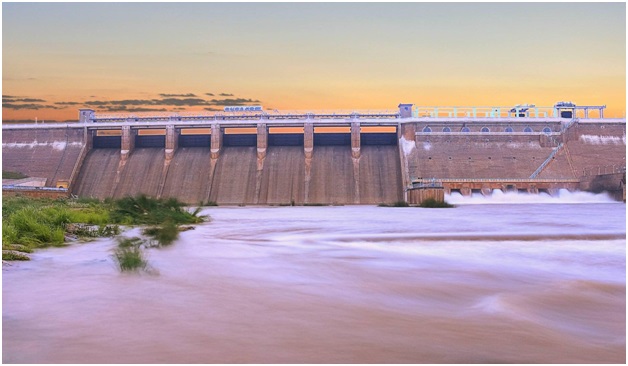
- 08 Nov 2023
Why in the News?
The third and final flood warning has been issued for five southern districts after the water level in Vaigai dam touched 69 feet (full reservoir level 71 ft) at 7 a.m. on Wednesday, November 8.
About Vaigai Dam:
- Built across the Vaigai River, the Vaigai Dam is located near Andipatti in Tamil Nadu's Theni district.
- The dam was inaugurated by then Chief Minister K. Kamaraj on January 21, 1959, and is often referred to as the lifeline of the people of this region.
- The farmers in the region are completely dependent on the water from the dam for irrigation purposes.
- With a height of 111 feet, the dam has the capacity to store up to 71 feet of water.
- Its main purpose is to provide irrigation water for the Madurai and Dindigul districts, as well as drinking water for Madurai and Andipatti residents.
- Close to the dam, the Government of Tamil Nadu has established an Agricultural Research Station dedicated to crop research.
- Additionally, there is a charming garden called Little Brindavan situated near the dam, offering a delightful place for visitors.
Project Dolphin (The Hindu)
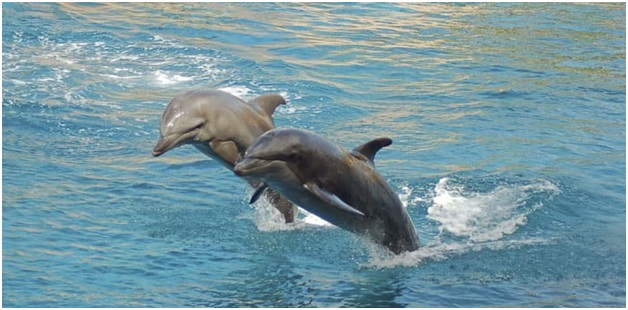
- 08 Nov 2023
Why in the News?
In an effort to conserve dolphins and their habitat, the Tamil Nadu government has issued orders to implement Project Dolphin under the Union government’s Integrated Development of Wildlife Habitats scheme.
About Project Dolphin:
- Project Dolphin is a national conservation initiative approved in 2019 during the first meeting of the Prime Minister-led National Ganga Council (NGC) and launched in 2021 to safeguard both riverine and oceanic dolphin species.
- It's part of the larger Arth Ganga program, which is a government initiative.
- It is modeled after Project Tiger, the successful conservation program that has played a significant role in the resurgence of tigers in India.
- The Project Dolphin will strengthen the marine ecology and overall health of the marine Environment and will be implemented at a cost of Rs.8.13 crore.
- The major habitats of the dolphins are found in the Gulf of Mannar Biosphere Reserve (Tamil Nadu).
- The Ministry of Environment, Forests, and Climate Change is responsible for implementing Project Dolphin.
- The main goal is to ensure the long-term survival of these dolphins and, by extension, the overall health of the river's aquatic life.
- The National Mission for Clean Ganga (NMCG) started a dolphin conservation program in 2016 to work towards this important mission.
- Dolphins play an important role in keeping the marine environment in balance.
- Dolphins worldwide face various natural and human-induced threats which include hunting, entanglement in fishing nets, overfishing, climate change, ship strikes, tourism activities, toxic contamination, noise pollution, oil and gas development, and habitat degradation.
- The conservation of dolphins and their aquatic habitat through the use of modern technology by engaging with fishermen and other ocean-dependent populations is proposed under the project.
- The project will focus on key activities including strengthening of protection activities through better patrolling anti-poaching activities and strengthening of the surveillance and patrolling teams with modern equipment and technology;
- Rescue and rehabilitation activities through the strengthening of veterinary services, patrolling and training, etc;
- Dolphin habitat improvement through the restoration of coastal eco-system like mangroves, corals, sea grass, etc;
- Removal of ghost nets and reduction of pollution in coastal areas;
- enhancing awareness through the celebration of “National Dolphin Day”
Euclid Mission (NASA)
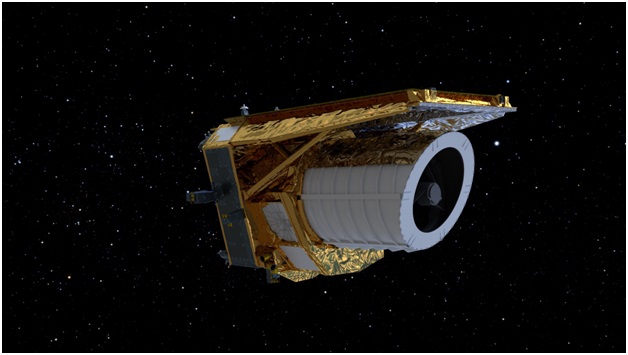
- 07 Nov 2023
Why in the News?
The Euclid mission, which will investigate the mysteries of dark matter and dark energy, released its first five science images recently.
About Euclid Mission:
- Euclid is a European mission, built and operated by European Space Agency (ESA), with contributions from NASA.
- Euclid is designed to give important new insights into the "dark side" of the universe -- namely dark matter and dark energy, both thought to be key components of our cosmos.
- It was launched from Cape Canaveral, Florida, (USA) on 1 July 2023 and the launch vehicle used was ‘SpaceX Falcon 9’.
- The mission derives its name from Euclid of Alexandria, an ancient Greek mathematician from around 300 BC, who laid the foundations of geometry.
- Euclid Mission Objective: The primary goal of the Euclid mission is to create a three-dimensional map of the universe, with time as the third dimension.
- This will be achieved by observing billions of galaxies, extending up to 10 billion light-years away, and covering over a third of the celestial sphere.
- Euclid will explore how the Universe has expanded and how structure has formed over cosmic history, revealing more about the role of gravity and the nature of dark energy and dark matter.
- The Euclid Consortium – consisting of more than 2,000 scientists from 300 institutes in 13 European countries, the U.S., Canada, and Japan – is responsible for providing the scientific instruments and scientific data analysis.
- NASA provided the detectors of the Near-Infrared Spectrometer and Photometer, NISP.
- Euclid is a medium-class mission in ESA’s Cosmic Vision Programme.
World Local Production Forum (WLPF) (PIB)
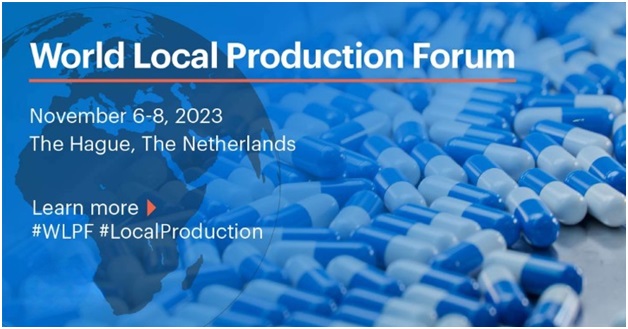
- 07 Nov 2023
Why in the News?
The Indian delegation led by Shri Bhagwant Khuba, Union Minister of State for Chemicals and Fertilizers participated in the Second World Local Production Forum (WLPF) held in Hague, Netherlands.
About the World Local Production Forum (WLPF):
- The World Local Production Forum (WLPF) is an initiative by the World Health Organization (WHO).
- The inaugural WLPF took place virtually in 2021.
- Main Objective: The core aim of this forum is to enhance access to essential medicines and other health technologies.
- Role and Function: The WLPF serves as a regular platform for Member States and the global community to collaboratively develop strategies, mobilize collective efforts, and establish partnerships.
- These actions are directed towards promoting sustainable local production, ensuring timely and equitable access to high-quality health products.
- Secretariat: The Local Production and Assistance (LPA) Unit at the WLPF is responsible for overseeing the forum's activities.
- Second WLPF Goals: The second WLPF has several key objectives:
- To create a global platform for discussions addressing the primary challenges related to local production and technology transfer.
- To explore opportunities and mechanisms for overcoming obstacles in this regard.
- To champion sustainable local production capabilities that lead to improved access to safe, effective, and high-quality health products and technologies.
Indo-Pacific Maritime Domain Awareness (IPMDA) initiative (The Hindu)
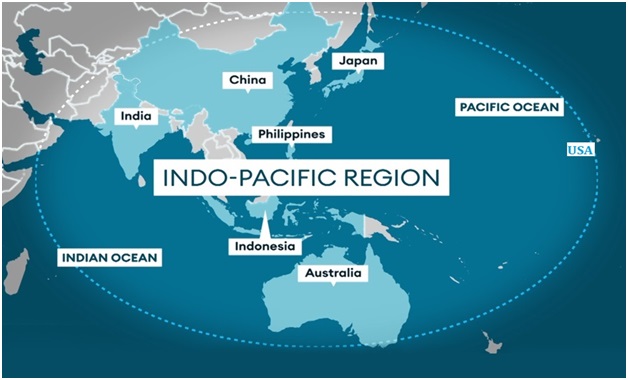
- 07 Nov 2023
Why in the News?
The Indian Navy Chief Admiral recently stated that the Indo-Pacific Maritime Domain Awareness (IPMDA) effort demonstrates the commitment to a free, open, inclusive, and rules-based Indo-Pacific region.
About the Indo-Pacific Maritime Domain Awareness (IPMDA) initiative:
- Announcement: It was announced at the 2022 Quad Leaders’ Summit in Tokyo.
- The primary objective is to track "dark shipping" and develop a more comprehensive, timely, and precise understanding of maritime activities in the Indo-Pacific region.
- Geographic Coverage: IPMDA integrates three critical regions in the Indo-Pacific:
- the Pacific Islands, Southeast Asia, and the Indian Ocean region.
- Purpose: IPMDA is a technology and training initiative aimed at enhancing maritime domain awareness in the Indo-Pacific.
- It seeks to increase transparency in critical waterways in the region.
- Technology Utilized: Innovative technology, including the collection of commercial satellite radio frequency data, is employed.
- The goal is to provide partners across Southeast Asia, the Indian Ocean region, and the Pacific with near real-time information on activities occurring in their maritime zones.
Graded Response Action Plan (GRAP) (Indian Express)
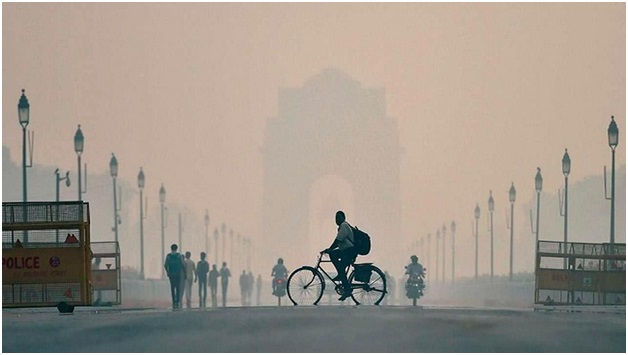
- 07 Nov 2023
Why in the News?
As the Air Quality Index (AQI) in the National Capital Region reaches 'severe' levels, the Commission for Air Quality Management (CAQM) activated Stage 4 measures from the Graded Response Action Plan (GRAP) recently.
What is the Graded Response Action Plan (GRAP)?
- GRAP is a set of emergency measures that kick in to prevent further deterioration of air quality once it reaches a certain threshold in the Delhi-NCR region.
- Approved in 2016 after the Supreme Court’s order in M. C. Mehta vs. Union of India (2016) and notified in 2017.
- The Supreme Court-appointed Environment Pollution (Prevention & Control) Authority (EPCA) to implement GRAP measures till 2020.
- However, the EPCA was dissolved and replaced by the Commission for Air Quality Management (CAQM) in 2020.
- From 2021, the Commission for Air Quality Management (CAQM), a statutory body responsible for implementing GRAP.
- CAQM relies on air quality and meteorological forecasts by the India Meteorological Department (IMD) and the Indian Institute of Tropical Meteorology (IITM).
- GRAP is incremental in nature and thus, when the air quality dips from ‘poor’ to ‘very poor,’ measures listed under both sections have to be followed.
- Stage 1 of GRAP is activated when the AQI is in the ‘poor’ category (201 to 300),
- Stage 2 is when it’s in the ‘Very poor’ category (301-400),
- Stage 3 is when the AQI is the ‘Severe’ category (401-450) and finally
- Stage 4 is when it rises to the ‘Severe +’ category (more than 450).
Global Landscape of Climate Finance 2023 (DownToEarth)

- 07 Nov 2023
Why in the News?
According to a new report, global climate finance is on the rise, yet it is not increasing at a scale and pace sufficient to address the climate crisis effectively.
About Global Landscape of Climate Finance 2023:
- The Global Landscape of Climate Finance is an annual report published by the Climate Policy Initiative (CPI).
- It provides the most comprehensive overview of global climate-related primary investment, covering both public and private finance.
- The report tracks climate finance flows across a range of sectors, including renewable energy, energy efficiency, transport, climate adaptation, and mitigation.
- This report concludes by calling for governments and investors to increase their support for climate finance, particularly for adaptation finance.
- It also recommends that more data be collected on climate finance flows to better understand where the gaps are and how to address them.
- It is an important tool for tracking global progress on climate finance and identifying areas where further investment is needed.
- It is an essential resource for policymakers, investors, and other stakeholders who are working to finance the transition to a low-carbon and climate-resilient economy.
- Key findings from the 2023 edition of the Global Landscape of Climate Finance report:
- Global climate finance reached an estimated USD 1.3 trillion on an annual average in 2021/2022, up from USD 653 billion in 2019/2020.
- The majority of climate finance is still directed towards mitigation activities, such as renewable energy and energy efficiency.
- There was a significant increase in climate finance for adaptation activities in 2021/2022.
- The growth in global climate finance was concentrated in a handful of geographies, with China, the US, Europe, Brazil, Japan, and India receiving 90% of increased funds.
- Private finance accounted for 60% of global climate finance in 2021/2022, up from 52% in 2019/2020.
Guindy National Park (The Hindu)
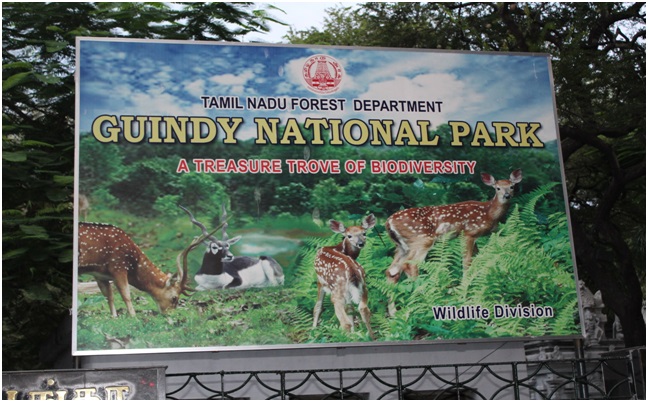
- 06 Nov 2023
Why in the News?
Guindy National Park, packed with blackbucks and birds, is one of the few national parks located in an Indian metropolis.
About the Guindy National Park:
- Guindy National Park is a protected area, located in the heart of Chennai’s metropolitan area of Tamil Nadu.
- It's the 8th smallest national park in India, covering an area of 2.70 square kilometers (1.04 square miles).
- This national park is unique because it is situated within the city of Chennai and is an extension of the grounds around Raj Bhavan, which was formerly known as the 'Guindy Lodge' and serves as the official residence of the governor of Tamil Nadu.
- Guindy National Park plays a crucial role in both ex-situ and in-situ conservation efforts.
- It provides a habitat for various wildlife species, including 400 blackbucks, 2,000 spotted deer, 24 jackals, numerous snakes, geckos, tortoises, and over 130 bird species.
- Flora: Guindy National Park features a diverse range of vegetation, including dry evergreen scrub and thorn forests, grasslands, and water bodies.
- Fauna: The park is home to 14 mammal species, over 60 species of butterflies and spiders each, and a wide variety of invertebrates such as grasshoppers, ants, termites, crabs, snails, slugs, scorpions, mites, earthworms, and millipedes.
Cnemaspis Rashidi (The Hindu)
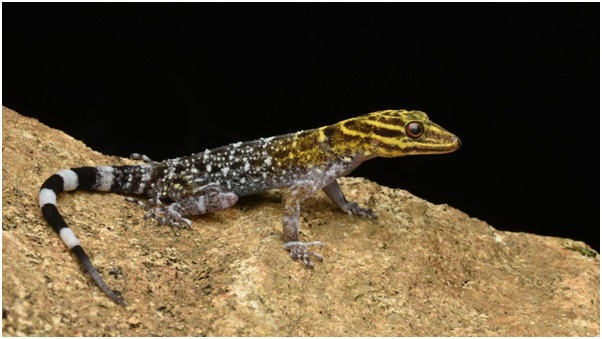
- 06 Nov 2023
Why in the News?
A new species of gecko has been found recently in Tamil Nadu's Western Ghats, near Rajapalayam.
About Cnemaspis Rashidi:
- Cnemaspis Rashidi, also known as Rashid's dwarf gecko, is a recently discovered species of gecko in the Western Ghats of India.
- It is the smallest species in the genus Cnemaspis, measuring approximately two inches long from its snout to the vent.
- It is characterized by its beautiful color patterns of yellow, white, and black on its back.
- Cnemaspis rashidi is endemic to the Western Ghats.
- It was discovered in 2023 by a team of scientists from the Indian Institute of Science Education and Research (IISER) Pune and the Madras Crocodile Bank Trust.
- The scientists found the gecko at an altitude of 1,245 meters at the Kottamalai estate near Rajapalayam in Tamil Nadu.
- This is the 94th species of gecko that has been identified to date, out of 93 that have been reported.
- It is also a reminder of the rich biodiversity of the Western Ghats, which is one of the world's most important biodiversity hotspots.
National Mineral Development Corporation (NMDC) (PIB)

- 06 Nov 2023
Why in the News?
Recently, Shri Nagendra Nath Sinha, Secretary, Ministry of Steel, unveiled a groundbreaking ceremony for the Mining operations at Mount Celia Gold Project located in Western Australia.
About National Mineral Development Corporation (NMDC):
- National Mineral Development Corporation (NMDC), a Navratna Public Sector Enterprise under the Ministry of Steel, Government of India.
- It is the single largest producer of iron ore in India.
- It owns and operates highly mechanized iron ore mines in Chhattisgarh and Karnataka.
- The registered office is situated in Hyderabad, Telangana.
- NMDC is considered to be one of the low-cost producers of iron ore in the world.
- It also operates the only mechanized diamond mine in India at Panna, Madhya Pradesh.
- The company is involved in the exploration of a variety of minerals, including iron ore, copper, rock phosphate, limestone, dolomite, gypsum, bentonite, magnesite, diamond, tin, tungsten, graphite, and beach sands.
- Most of the high-quality iron ore produced by NMDC is sold to the Indian domestic steel industry through long-term contracts.
Zanzibar (Indian Express)
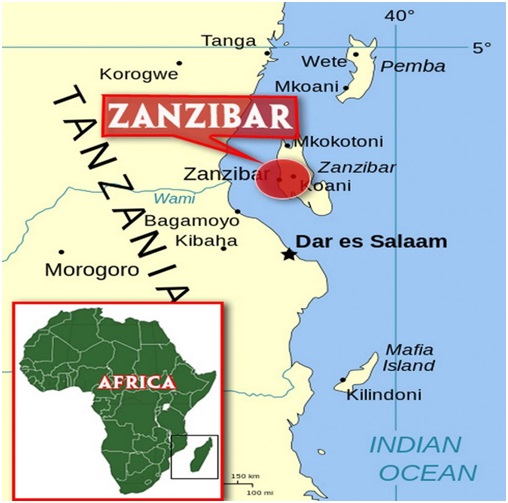
- 06 Nov 2023
Why in the News?
An IIT-Madras campus was inaugurated in Zanzibar on Monday, becoming the first campus of an IIT to be opened abroad.
Context:
- The first IIT campus outside of India was inaugurated on Monday with the opening of the IIT-Madras campus in Zanzibar.
- The pioneering venture is part of the central government’s initiative to project India’s education system onto the global stage.
- The campus is located in Bweleo district, a short distance from Zanzibar Town.
- The Zanzibar campus will benefit from an array of academic collaborations, including study abroad programs, internships with companies, and opportunities at the IIT-Madras campus in Chennai.
- It is open to students of all nationalities.
Key facts about Zanzibar (Tanzania):
- Zanzibar is a Tanzanian archipelago in the Indian Ocean, 25–50 kilometers located off the coast of east-central Africa and a semi-autonomous province of Tanzania.
- It comprises the main island of Unguja (informally referred to as Zanzibar), and Pemba Island, along with numerous smaller islands.
- Zanzibar City, on Unguja, is the archipelago's capital and largest city.
- The official languages of Zanzibar are Swahili and English.
- Zanzibar has a rich history, dating back to the 1st century AD.
- It was once a major center for the trade of spices, slaves, and ivory.
- The archipelago has been ruled by various empires and dynasties over the centuries, including the Portuguese, Omanis, and British.
- In 1964, Zanzibar gained independence from Britain and merged with Tanganyika to form the United Republic of Tanzania.
- Stone Town, the historic center of Zanzibar City, is a UNESCO World Heritage Site.
- The raised sands and sandstones with varied residual deposits are found on Zanzibar and Pemba islands which are similar to the alluvial deposits present on the African mainland.
- It is known for its vast wilderness areas.
- They include the plains of Serengeti National Park, populated by the “big five” game (elephant, lion, leopard, buffalo, rhino), and Kilimanjaro National Park, home to Africa’s highest mountain.
GST Amnesty Scheme (TOI)
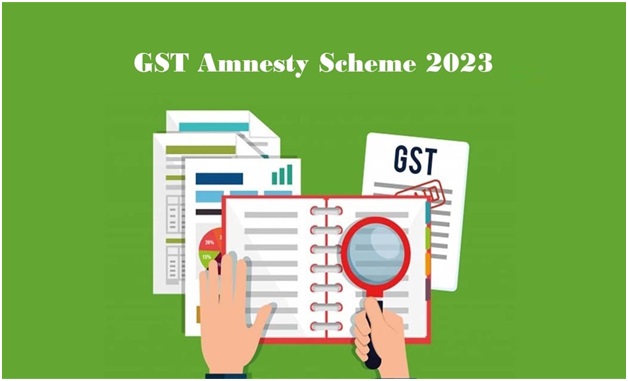
- 06 Nov 2023
Why in the News?
The finance ministry has come out with an amnesty scheme for filing appeals against Goods and Services Tax (GST) demand orders.
What is the GST Amnesty scheme?
- The GST Amnesty scheme was introduced by the Centre to help businesses comply with the Goods and Services Tax laws in the country.
- Every entity that needs to file its GST returns must conduct the process in a sequential manner.
- If the taxpayer misses the last date, they may have to pay penalties for not filing the returns.
- In such a situation, the GST Amnesty scheme helps taxpayers file their returns without hefty penalties.
- The plan also aids businesses whose registration stands canceled for non-filing of returns.
- Under the GST Amnesty scheme, taxpayers can file for the revocation of their cancellation as well.
How can one benefit from the GST Amnesty scheme?
- Taxpayers cannot file the GST return for a particular period without submitting the previous ones.
- A heavy penalty will also be levied on them for missing their filings.
- The GST Amnesty scheme allows taxpayers to file their pending returns without incurring a hefty fine.
- It will help them in complying with the indirect taxation laws of the country.
- It also aids business entities to appeal against the cancellation of their registration if they have not submitted the GST returns for three consecutive quarters.
- The scheme will be open till January 31, 2024.
Pavana River (TOI)
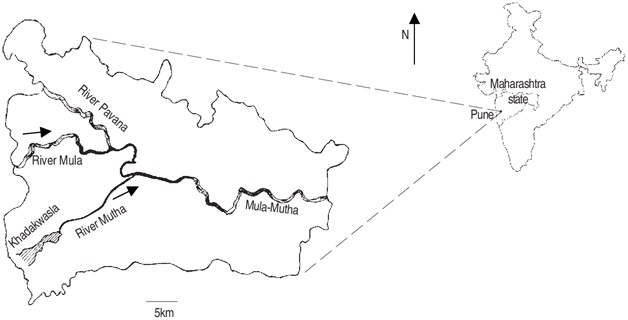
- 04 Nov 2023
Why in the News?
Recently residents of Thergaon area in Pune, are worrieda a lot owing to the thick layer of toxic foam on Pavana river near Kejudevi temple.
About the Pavana River:
- Location: The Pavana River is in the western part of Maharashtra, specifically in the Pune District.
- It crosses Pune City and acts as a natural boundary between Pune City and the Pimpri-Chinchwad area.
- Origin: The river begins in the Western Ghats, approximately 6 kilometers south of Lonavala.
- It's a tributary of the Bhima River and meets the Mula River within Pune city.
- Initially flowing east, it turns south and passes through the suburbs of Dehu, Chinchwad, Pimpri, and Dapodi before joining the Mula River.
- There is a dam is built on this river at Pavana Nagar, called the "Pavana Nagar Dam".
- The Pavana Nagar Dam is an earthfill gravity dam.
- It's 1,329 meters (4,360 feet) long and 42.37 meters (139.0 feet) high.
- The dam has a total storage capacity of 30,500.00 cubic kilometers.
- Its main purpose is to supply sufficient water to the nearby areas and is a crucial water source for the region.
Kaleshwaram Lift Irrigation Project (KLIP) (HT)
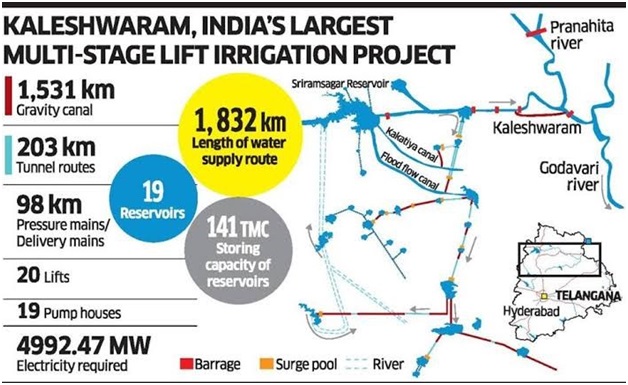
- 04 Nov 2023
Why in the News?
A controversy over alleged engineering lapses in the ?1 lakh crore Kaleshwaram lift irrigation project on the Godavari river triggered an electoral slugfest in poll-bound Telangana.
About Kaleshwaram Lift Irrigation Project (KLIP):
- Location: The Kaleshwaram Lift Irrigation Project (KLIP) is situated at Kaleshwaram village in Telangana, along the Godavari River.
- Confluence Point: It is located at the confluence of the Pranhita and Godavari Rivers.
- At this confluence, the Wardha, Painganga, and Wainganga rivers also meet, forming the seventh-largest drainage basin in the subcontinent.
- Originally called Pranahita-Chevella project in erstwhile Andhra Pradesh, it was redesigned, extended and renamed as Kaleshwaram project in Telangana in 2014.
- KLIP is known as the world's largest multi-stage and multi-purpose lift irrigation project.
- A significant feature of KLIP includes a series of underground and surface water pumping stations, claimed to be the world's largest of their kind.
- This lift irrigation system stretches over 300 kilometers and moves large volumes of water from rivers or reservoirs to be distributed through channels and additional reservoirs before reaching the next stations.
- Objective: The project's goal is to provide water to 45 lakh acres of land in Telangana for irrigation and drinking water.
- KLIP started in 2016 and will utilise approximately 283 thousand million cubic feet (TMC) of water from the Godavari River to serve 13 districts in Telangana.
Adaptation Gap Report 2023 (DownToEarth)
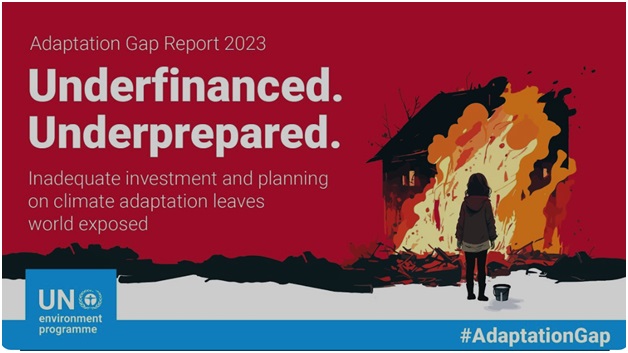
- 04 Nov 2023
Why in the News?
The Adaptation Gap Report states that funding for adaptation measures in developing nations has been declining and is insufficient of what is required.
About the Adaptation Gap Report:
- The Adaptation Gap Report (AGR) is an annual United Nation Enviroment Programme (UNEP) flagship publication.
- The report's primary objective is to inform the negotiators of the United Nations Framework Convention on Climate Change (UNFCCC) Member States, and the broader UNFCCC constituency, about the status and trends within climate adaptation at global and regional levels.
- AGR offers science-based recommendations to policymakers and decision-makers to enhance climate adaptation efforts in key climate-sensitive sectors.
- Since 2014, UNEP has been producing these assessments to support effective adaptation responses aligned with the UNFCCC's temperature and adaptation goals.
- The "adaptation gap" refers to the difference between actual adaptation efforts and the goals set by society, influenced by factors like climate change impacts, available resources, and competing priorities.
Key Findings of the Report:
- Adaptation costs are expected to rise significantly by 2050, especially in high-warming scenarios.
- The financial needs for adaptation are 10-18 times higher than the current international public adaptation fund flows.
- Urgent action is required to reduce greenhouse gas emissions and enhance adaptation efforts to protect vulnerable populations worldwide.
- In 2021, funding from developed countries to support adaptation projects in developing countries decreased by 15% compared to previous years.
- The report suggests seven strategies to bridge the adaptation gap, including increasing international financial support and mobilizing domestic resources.
- It also calls for a reform of the global financial system to facilitate easier access to climate-related funding from multilateral agencies such as the World Bank or the IMF.
Lucy Mission (NASA) (Indian Express)
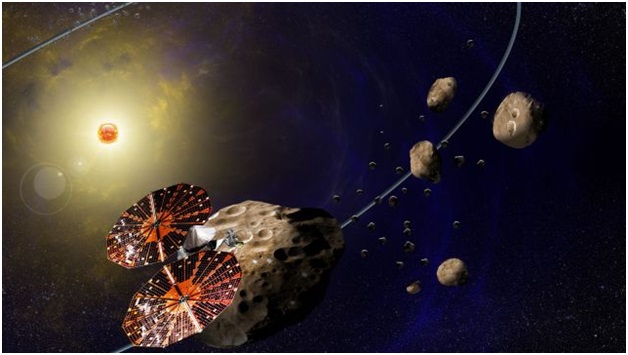
- 04 Nov 2023
Why in the News?
Recently NASA's Lucy mission has discovered that the asteroid Dinkinesh is actually a binary system of two asteroids.
About Lucy Mission:
- The Lucy Mission is a NASA space probe designed to explore the Trojan asteroids.
- These are the asteroids that share an orbit with Jupiter around the Sun.
- It's on a twelve-year journey to visit eight different asteroids and the entire mission costs around $981 million.
- It was launched on October 16, 2021, from Cape Canaveral Space Force Station or Kennedy Space Centre in Florida.
- The Lucy Mission is named for the fossilized skeleton of a human ancestor, which was named for the Beatles song "Lucy in the Sky with Diamonds."
- The mission's scientists hope that Lucy will help them to better understand our own origins, just as the Lucy fossil helped us to better understand our evolutionary history.
- The Lucy spacecraft is equipped with a suite of instruments that will be used to study the asteroids it encounters. These instruments include:
- A high-resolution visible camera
- A near-infrared spectrometer
- A thermal emission spectrometer
- A dust detector
- A radio occultation instrument
- Lucy's mission will provide new insights into the diversity of the Trojan asteroids, their formation, and their role in the early solar system.
- The mission will also test new technologies for deep space exploration, such as a solar-powered propulsion system and a terminal tracking system.
- It made its first gravity assist from Earth on October 16, 2022, and on November 1, 2023, it flew by its first asteroid, Dinkinesh, a binary asteroid in the main belt.
- Lucy will make another gravity assist from Earth in 2024, and in 2025, it will fly by the inner main-belt asteroid 52246 Donaldjohanson.
World Food India 2023 (HT)
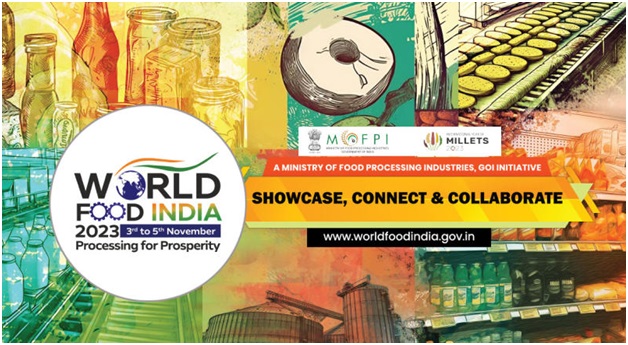
- 04 Nov 2023
Why in the News?
Prime Minister Narendra Modi stated that India's food diversity benefits investors worldwide as he inaugurated the second edition of "World Food India 2023" at Bharat Mandapam in Delhi recently.
What is World Food India 2023?
- World Food India 2023 provides a gateway of access to the Indian food market, promoting collaborations between domestic and foreign investors.
- It is organized by India's Ministry of Food Processing Industries in New Delhi from November 3rd to 5th.
- Objective: It aims to exhibit India's rich food culture and attract global investments in the food processing sector.
- The event brings together manufacturers, producers, investors, policymakers, and organizations from around the world involved in the food industry.
- Key Areas of Focus: The event is focused on leveraging millets as a superfood, positioning India as a global hub for food processing, unlocking growth potential in strategic segments, establishing an efficient ecosystem, and promoting sustainable development.
- India's Vision: This event aligns with India's vision to become a global leader in the food processing industry, highlighting the country's production, consumption, and export potential across various food sectors.
- India is taking steps to create an inclusive and sustainable ecosystem, attract foreign investment, and improve the ease of doing business in the food processing sector.
- Notably, the first edition of World Food India took place in 2017.
- India is a global leader in the production of various agricultural products, such as milk, bananas, mangoes, papayas, guavas, ginger, okra, and buffalo meat.
- It also ranks second in the production of rice, wheat, potatoes, garlic, and cashew nuts.
- Moreover, the United Nations has declared 2023 as the International Year of Millets (IYM 2023) with the goal of increasing millet production and consumption worldwide.
ENCORE (NewsOnAIR)
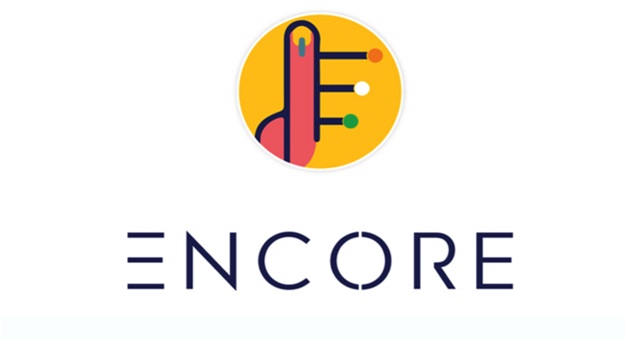
- 03 Nov 2023
Why in the News?
Recently, the Election Commission of India (ECI) has developed in-house software named ‘ENCORE’ designed for efficient candidate and election management.
About ‘ENCORE’:
- The Election Commission of India has designed in-house software for complete Candidate and election management through ‘ENCORE’ which stands for Enabling Communications on Real-time Environment.
- This provides a seamless facility for Returning Officers to process candidate nomination, affidavit, Voter turnout, counting, results and data management.
- The ENCORE counting application is an end-to-end application for returning officers to digitize the votes polled, tabulate the round-wise data and then take out various statutory reports of counting.
- An additional application, the ENCORE Scrutiny Application, allows Returning Officers to scrutinize online nominations submitted by candidates.
- This process involves verifying and marking the status of nominations as Accepted, Rejected, or Withdrawn, facilitating the creation of the final list of contesting candidates and symbol assignment.
- The ECI offers an online portal for candidate nomination and affidavit submission.
- Candidates can create accounts, complete nomination forms, submit security deposits, and plan their visits to the Returning Officer through this portal.
- The Candidate Affidavit portal is designed to display information about a candidate's financial assets and liabilities, offering transparency in candidates' financial disclosures.
- The ENCORE Nodal App serves as a platform for various government departments, including fire, education, police, environment, and CPWD, to issue 'no objection' certificates.
- These certificates are required before granting permission for political parties or candidates to hold rallies, road shows, and meetings, ensuring that all necessary clearances are obtained before public events.
Gundla Brahmeswaram Wildlife Sanctuary (New Indian Express)
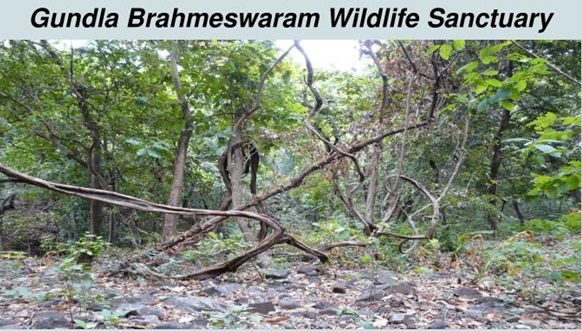
- 03 Nov 2023
Why in the News?
In a first-of-its-kind, over 50 grass species were identified during a two-day workshop and survey on ‘Grasses Identification and Grassland Management’ at the Gundla Brahmeswaram Wildlife Sanctuary in the Nagarjunasagar-Srisailam Tiger Reserve (NSTR).
About Gundla Brahmeswaram Wildlife Sanctuary:
- Location: It is located in the Kurnool & Prakasam of Andhra Pradesh with an area of 1194 sq km.
- Located between two important hill passes known as "Mantralamma kanuma" and "Nandi kanuma".
- The Northern part of this Sanctuary forms a major part of the Southern boundary for Nagarjunasagar-Srisailam Tiger Reserve.
- River: The Gundlakamma River stretches across the sanctuary.
- It also has many, mesic sites and ancient rock formations.
- Indicator Species: Tiger, Panther, Wild dog, Bats, Fig trees.
- It was declared a wildlife sanctuary on September 18, 1990.
- Forest Type: Dry mixed deciduous forest, moist dry deciduous, semi-evergreen, dry deciduous scrub forest and dry savannahs.
- Flora: The forest is an adobe to medicinal plants of which 10 are critically endangered, 21 are Endangered and 27 species are vulnerable.
- The plants like Madhuca longifolia, Dellenia pentagyna, Aristolochia indica, Terminalia arjuna, Pithecolobium ducle, Adina cordifolia, Vanda spp; etc; thrive here.
- Fauna: Wildlife like Tiger, Leopard, Flying squirre. angur, jungle cat, panther, tiger, mouse deer, hyena, bonnet monkey etc; are found here.
Hydroclimate Extremes (PIB)
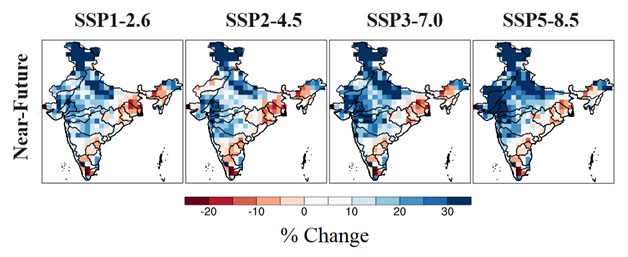
- 03 Nov 2023
Why in the News?
A recent study conducted at Banaras Hindu University explored the impact of global warming on hydroclimate extremes in the Indian River Basins (IRBs).
About Hydroclimate Extremes:
- Hydroclimatic extremes are severe events with significant impacts on both human societies and ecosystems.
- These events encompass phenomena such as floods, droughts, heat waves, and heavy rainstorms.
Key Findings:
- The research utilized highly detailed simulated precipitation data derived from the Coupled Model Intercomparison Project-6 (CMIP6) experiments.
- The study's results suggest an anticipated rise in the frequency of extreme rainfall in the Western Ghats and Northeast River basins.
- Additionally, heavy rainfall intensity is predicted to increase in the Upper Ganga and Indus basins.
- The research sheds light on an agricultural drought in the lower Ganga basin, attributed to a reduction in average rainfall.
Importance:
- This study underscores the importance of policymakers creating strategies to address both excess and shortage of water resources.
- It anticipates a 4% to 10% rise in intense rainfall in the western regions of Indian river basins, along with noteworthy shifts in precipitation patterns in specific areas.
- These alterations in hydroclimate extremes could greatly impact agriculture, public health, and socio-economic conditions.
- Furthermore, the research identifies critical areas prone to urban flooding in densely populated cities, emphasizing the need for policymakers to devise tailored climate adaptation and mitigation plans.
- These should encompass policies related to water management and emergency services to mitigate the risks posed by extreme events in these basins.
UN Office for the Coordination of Humanitarian Affairs (OCHA) (TOI)
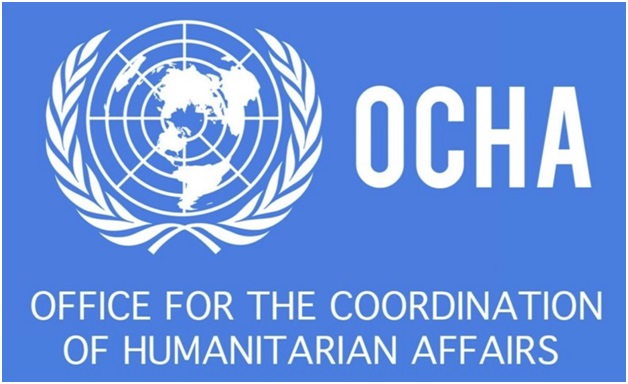
- 03 Nov 2023
Why in the News?
??The UN Office for the Coordination of Humanitarian Affairs (OHCA), on Friday, launched an emergency aid appeal seeking $1.2 billion to help some 2.7 million people in Gaza and the West Bank.
About the UN Office for the Coordination of Humanitarian Affairs (OCHA):
- OCHA is part of the United Nations (UN) and focuses on humanitarian issues.
- It coordinates and leads UN responses to humanitarian crises worldwide.
- It was established by the General Assembly of the United Nations in 1991.
- OCHA's goal is to save lives, protect people, and help those affected by disasters and conflicts.
- It works with governments, non-governmental organizations (NGOs), and other partners to respond to emergencies.
- It provides funding to support relief efforts in crisis-affected regions.
- There are two types of pooled funds:
- The Central Emergency Response Fund (CERF) can provide financial support for emergencies anywhere on the globe.
- Country-Based Pooled Funds (CBPFs) are specific to individual countries.
- These funds operate from two central hubs located in Geneva and New York, serving as global operational centres.
- The office works to ensure that humanitarian aid reaches those in need.
- It has two headquarters locations, Geneva and New York, which act as centres of global operations.
- It helps plan and manage humanitarian responses, ensuring efficiency and effectiveness.
- OCHA promotes coordination among humanitarian organizations to avoid duplication and ensure better outcomes.
Bletchley Declaration 2023 (Indian Express)
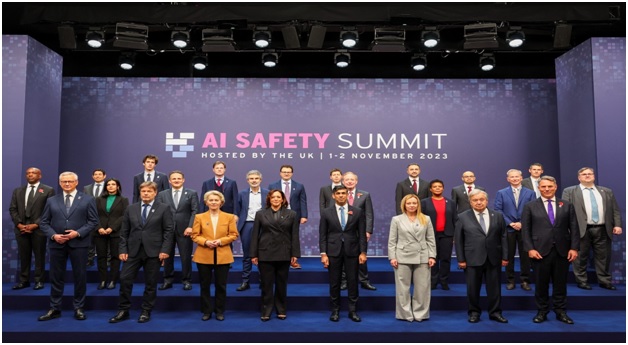
- 03 Nov 2023
Why in the News?
The United Kingdom hosted a major Artificial Intelligence (AI) meeting, bringing together political leaders and technological professionals to explore the potential benefits and risks of this fast-evolving technology.
About the Bletchley Declaration:
- The Bletchley Declaration provides a comprehensive overview of the worldwide perspective on the potential benefits and risks associated with artificial intelligence (AI).
- It underlines the necessity of aligning AI systems with human intentions and encourages a deeper exploration of AI's full capabilities.
- Furthermore, the document acknowledges the potential for significant harm caused by AI, whether intentional or unintentional, including the possibility of catastrophic consequences.
- The Bletchley Declaration places great emphasis on safeguarding human rights, promoting transparency, ensuring explainability, upholding fairness, ensuring accountability, establishing regulation, prioritizing safety, incorporating human oversight, adhering to ethical standards, addressing bias issues, safeguarding privacy, and protecting data.
- This document is a reflection of the intricate negotiations between nations with differing interests and legal systems, encompassing countries such as the United States, the United Kingdom, the European Union, and China.
- The Bletchley Declaration highlights the crucial role of civil society in addressing AI safety concerns, despite some criticism from civil society groups that felt excluded from the summit.
- It also places a significant responsibility on companies engaged in the development of cutting-edge AI systems, emphasizing the need to ensure their safety through rigorous testing, evaluation, and the implementation of appropriate measures.
Global Stocktake should account for failures of developed nations: BASIC nations at COP28 (The Hindu)
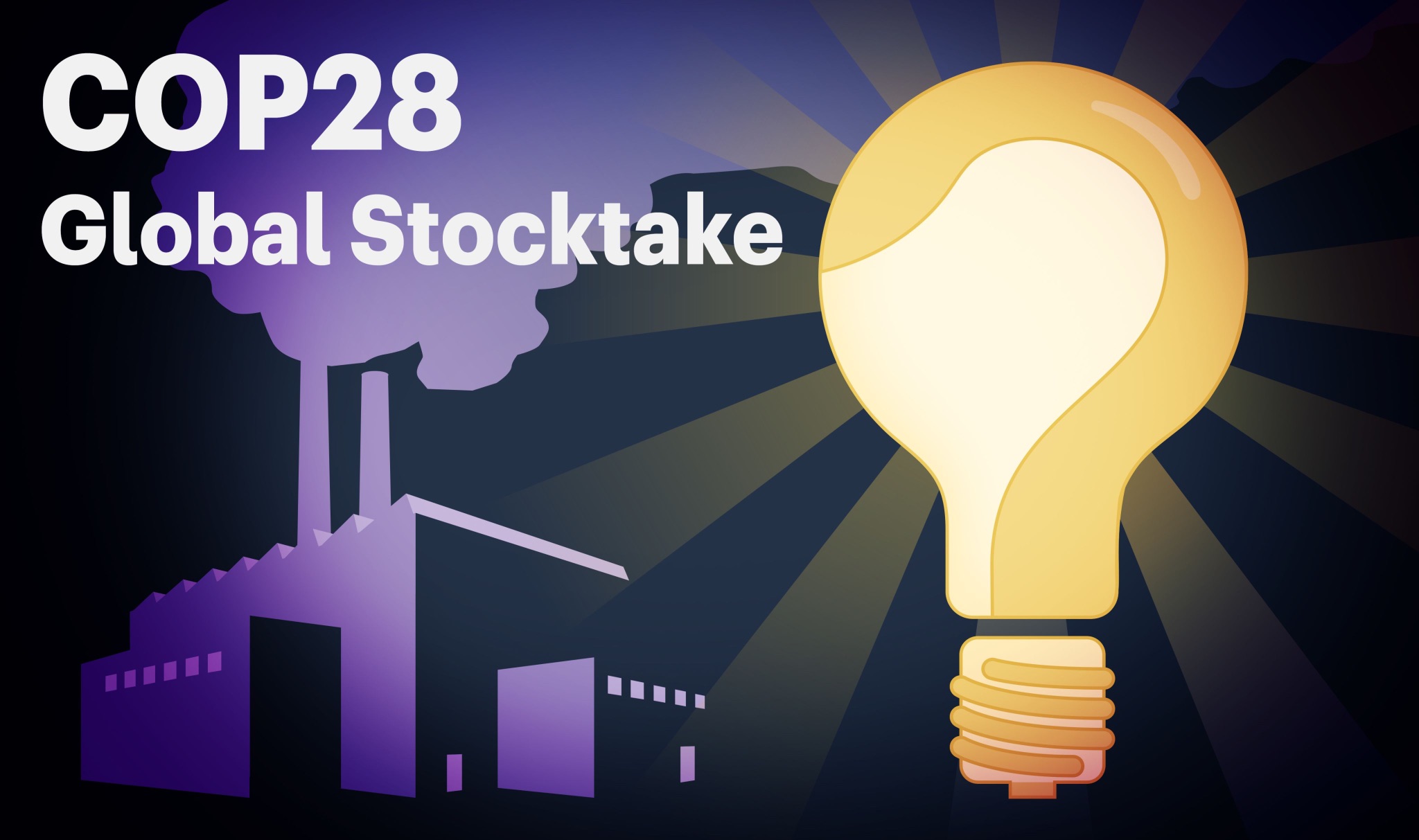
- 04 Dec 2023
Why is it in the News?
The BASIC grouping, comprising Brazil, South Africa, India and China, has pushed during annual climate talks here that the Global Stocktake should also account for the failures of the developed nations.
About Global Stocktake:
- The global stocktake serves as a mechanism for nations and stakeholders to collectively assess their progress in achieving the objectives outlined in the Paris Climate Change Agreement, highlighting areas of success and areas needing improvement.
- In essence, it is akin to taking inventory on a global scale.
- Essentially, the global stocktake involves a comprehensive examination of everything related to the world's status regarding climate action and support.
- It entails identifying gaps and collaboratively strategizing to steer a more effective course towards accelerating climate action.
- This evaluation occurs every five years, with the inaugural stocktake scheduled to conclude at COP28.
- Background: In 2015, during COP21 in Paris, it became obligatory for all countries to establish emissions reduction targets and adapt to climate change impacts, known as Nationally Determined Contributions (NDCs).
- The agreement mandated that countries evaluate their progress, starting in 2023 and subsequently every five years.
- Initial Assessment: The UN released a technical report on the first Global Stocktake in September 2023.
- According to this report, while the global community demonstrated some progress, it fell short of the necessary scale.
- The report emphasizes the need to expedite implementation, adopting an all-of-society approach to enhance ambition across all aspects, aligning with the goals of the Paris Agreement and addressing the climate crisis.
- The report acknowledges existing progress but underscores the urgency for more concerted efforts.
- Recognizing well-known gaps, the technical findings also spotlight opportunities and creative solutions, addressing both current challenges and those emerging.
- Additionally, the report notes that the average global temperature has risen by nearly 1.2 degrees Celsius since pre-industrial times.
INCOIS wave rider buoy washes ashore in Gopalpur (New Indian Express)
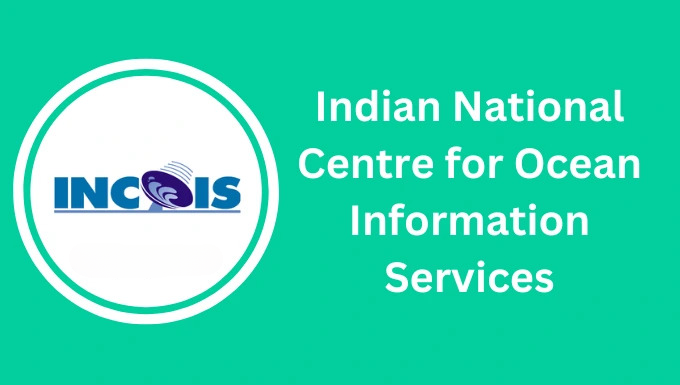
- 04 Dec 2023
Why is it in the News?
A wave rider buoy, equipped belonging to the Indian National Centre for Ocean Information Services (INCOIS), with GPS and various weather-related instruments, was found ashore at the Gopalpur Military Station in Ganjam district on Saturday.
About Indian National Centre for Ocean Information Services (INCOIS):
- INCOIS is an autonomous organization under the Ministry of Earth Sciences (MoES).
- It is a unit of the Earth System Science Organization (ESSO), New Delhi.
- It is located in Hyderabad & was established in 1999.
- The ESSO operates as an executive arm of the Ministry of Earth Sciences (MoES) for its policies and programmes.
- It is mandated to provide the best possible ocean information and advisory services to society, industry, government agencies and the scientific community through sustained ocean observations and constant improvement through systematic and focused research.
What is the Earth System Science Organisation (ESSO)?
- Earth System Science Organisation (ESSO) is a virtual organisation set up by the Ministry of Earth Sciences GOI in 2007 and it is the executive arm of MoES.
- It has three major branches of earth sciences viz.,
- Ocean Science & Technology
- Atmospheric Science & Technology
- Geosciences and Technology.
- The overall vision of the ESSO is to excel in knowledge and technology enterprise for the earth system science realm towards the socio-economic benefit of the Indian sub-continent and in the Indian Ocean region.
- The ESSO contributes to the areas of Weather (General) and Weather advisories specific to agriculture, aviation, shipping, sports, etc. Monsoon, Disasters (cyclones, earthquakes, tsunamis, sea level rise), Living and non-living resources (fishery advisory, poly-metallic nodules, gas hydrates, freshwater etc), Coastal and Marine Ecosystems and Climate Change, Underwater Technology.
Scientists Create Tiny Robots Called 'Anthrobots' From Human Cells (India Times)
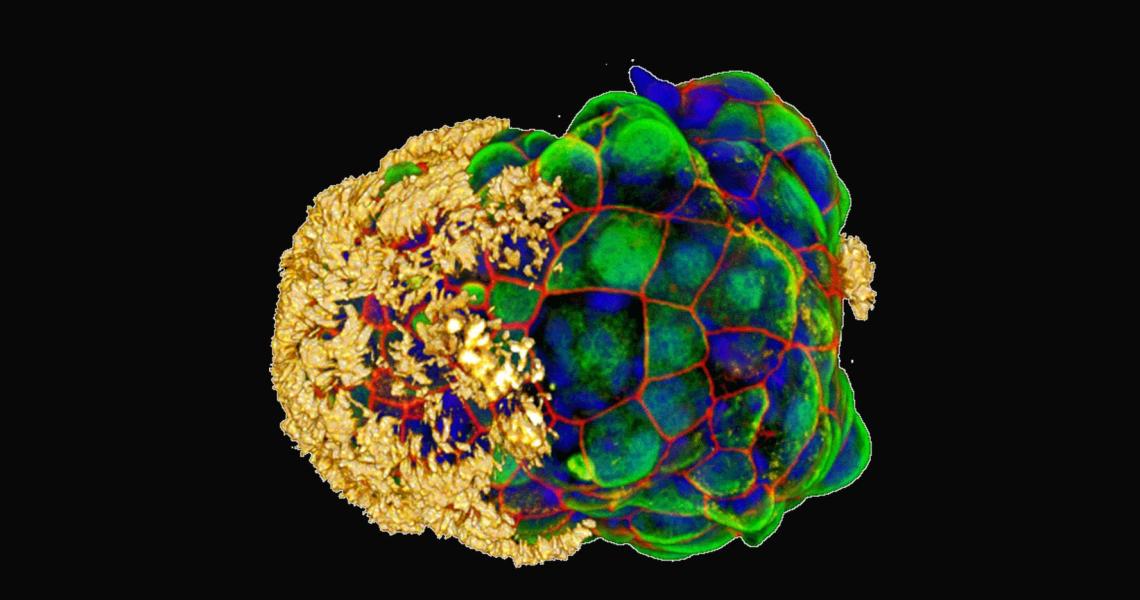
- 04 Dec 2023
Why is it in the News?
Scientists have created 'Anthrobots' , tiny living robots from human cells and the robots are able to move around in a lab dish and one day may be helpful in healing wounds or damaged tissue.
What is an Anthrobots?
- Anthrobots are self-assembling biological robots made from human tracheal cells, capable of movement and encouraging neuron growth.
- They can be created from adult human cells without genetic modifications, making them a potential patient-specific therapeutic tool.
- Anthrobots represent a significant advancement in regenerative medicine, potentially aiding in treating a variety of diseases and injuries.
- The multicellular robots, ranging in size from the width of a human hair to the point of a sharpened pencil, were made to self-assemble and shown to have a remarkable healing effect on other cells.
- The discovery is a starting point for the researchers’ vision to use patient-derived biobots as new therapeutic tools for regeneration, healing, and treatment of disease.
What are Tracheal cells?
- Tracheal cells come from the lining of the bronchi and trachea, forming the network of tubes that transport air to the lungs.
- These cells, a type of epithelial cell, are crucial for producing lubricating mucus to maintain the functionality of the airways.
- They are responsible for generating not only mucus but also various other compounds, all of which play a vital role in the process of respiration.
Is White Lung Syndrome caused by a new pathogen? Here is what you need to know (Indian Express)
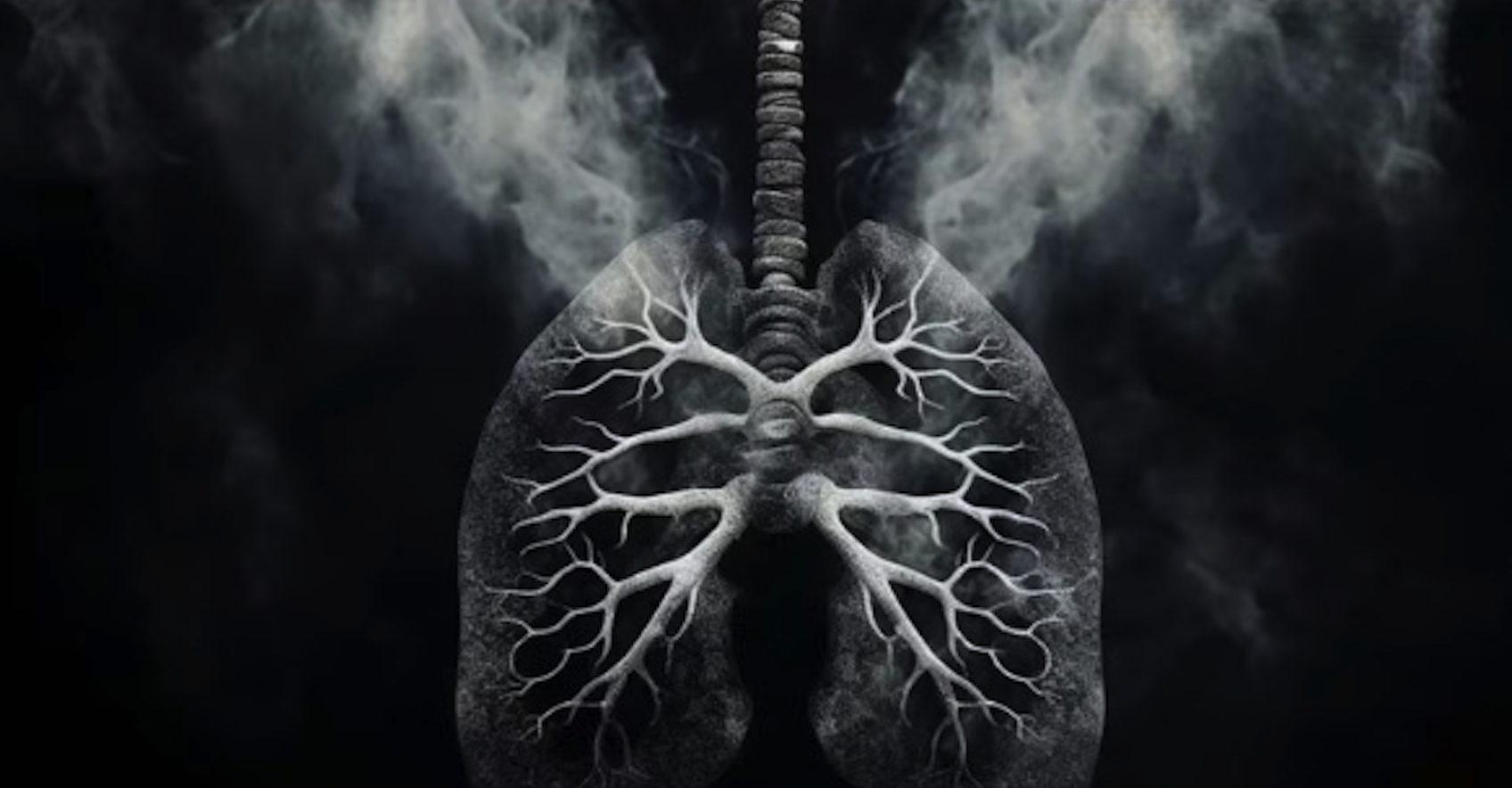
- 04 Dec 2023
Why is it in the News?
An outbreak of a respiratory illness in northern China and Ohio in the US — the White Lung Syndrome as people are calling it — has sparked speculation online of a new pandemic threat after COVID-19.
About White Lung Syndrome:
- “White lung syndrome” is a term used to describe a severe form of pneumonia characterized by the appearance of white patches on chest X-rays.
- While the term suggests a specific disease, it is actually used to describe a variety of conditions that cause similar symptoms.
- Symptoms: The specific symptoms of white lung syndrome can vary depending on the underlying cause, but some of the most common symptoms include:
- Cough, feThere is no specific way to prevent white lung syndrome.
- ver, shortness of breath, chest pain, fatigue, loss of appetite and wheezing
- In severe cases, white lung syndrome can lead to respiratory failure, which is a life-threatening condition.
- Causes: There are many different causes of white lung syndrome, including:
- Viral infections: These are the most common cause of white lung syndrome, including viruses like influenza, respiratory syncytial virus (RSV), and COVID-19.
- Bacterial infections: These are less common than viral infections, but can still cause white lung syndrome.
- Fungal infections: These are rare, but can occur in people with weakened immune systems.
- Inhalation of harmful substances: This can include inhaling dust, fumes, or chemicals.
- Autoimmune diseases: These are diseases in which the body’s immune system attacks healthy tissues.
- Prevention: There is no specific way to prevent white lung syndrome.
- However, there are vaccines available for some of the viruses that can cause white lung syndrome, such as influenza and COVID-19.
- Treatment: The treatment for white lung syndrome depends on the underlying cause.
- In some cases, antibiotics or antiviral medications may be prescribed.
- In more severe cases, oxygen therapy or mechanical ventilation may be necessary.
11 bodies recovered after the volcanic eruption in Indonesia, and 12 climbers are still missing (Indian Express)
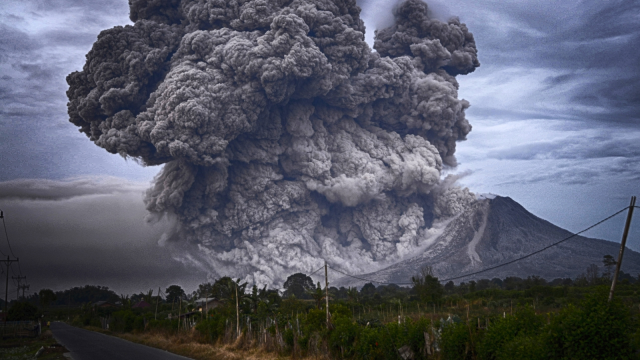
- 04 Dec 2023
Why is it in the News?
The bodies of 11 climbers were recovered on Monday a day after a furious eruption of the Mount Marapi volcano as Indonesian rescuers searched for 12 apparently still missing.
About Mount Marapi:
Don't confuse it with Mount Merapi, which is located on Java Island.
- ‘Mount Marapi’ located is a volcanic mountain located in West Sumatra of Indonesia.
- It also known as Marapi or Gunuang Marapi in Minangkabau.
- According to legend, the mountain is the site first settled by the Minangkabau people after their ship landed on the mountain when it was the size of an egg and surrounded by water.
- There are large numbers of upright burial stones in the region which are oriented in the direction of the mountain, indicating its cultural significance.
- A significant eruption occurred in 1979, and in April-May 2018, ashfalls to the southeast were recorded.
About Mount Merapi:
- Mount Merapi is a volcanic mountain on the island of Java in Indonesia and is the most active volcano in Indonesia (out of a total of 30 active volcanoes).
- Although Mount Merapi was discovered by humans in 1754, geologists have estimated that the volcanic mountain is over 400,000 years old.
- The last major eruption of Mount Merapi back in 2010. This eruption took the lives of 347 people, and a further 20,000 locals were forced to evacuate the area.
- The local name for Mount Merapi is Gunung Merapi which can be translated to Fire Mountain or Mountain of Fire.
- Mount Merapi is considered sacred by local people. They believe that a supernatural kingdom exists there.
- Mount Merapi has erupted countless times, which haven't been recorded in modern history.
- However, we do know that Merapi has erupted over 68 since 1548.
- Merapi has now been active for approximately 10,000 years.
PM Formalisation of Micro food processing Enterprises (PMFME) Scheme" launched under the Atmanirbhar Bharat Abhiyan with an outlay of Rs. 10,000 Crore supports 2 lakh micro food processing enterprises following One District One Product (ODOP) approac

- 08 Dec 2023
Why is it in the News?
As part of Atmanirbhar Bharat Abhiyan, the Ministry of Food Processing Industries (MoFPI) is implementing a centrally sponsored "PM Formalisation of Micro food processing Enterprises (PMFME) Scheme" for providing financial, technical and business support for setting up / upgradation of micro food processing enterprises in the country.
About PM Formalisation of Micro food Processing Enterprises (PMFME) Scheme:
- Launched on 29th June 2020, PMFMPE is a Centrally Sponsored Scheme by the Ministry of Food Processing Industries.
- It is designed to address the challenges faced by the micro-enterprises and to tap the potential of groups and cooperatives in supporting the upgradation and formalization of these enterprises.
- Aims:
- Enhance the competitiveness of existing individual micro-enterprises in the unorganized segment of the food processing industry and promote formalization of the sector; and
- Support Farmer Producer Organizations (FPOs), Self Help Groups (SHGs), and Producers Cooperatives along their entire value chain.
- Objectives: To build the capability of microenterprises to enable:
- Increased access to credit by existing micro food processing entrepreneurs, FPOs, Self Help Groups, and Co-operatives.
- Integration with an organized supply chain by strengthening branding & marketing.
- Support for the transition of existing 2,00,000 enterprises into a formal framework.
- Increased access to common services like common processing facilities, laboratories, storage, packaging, marketing, and incubation services.
- Strengthening of institutions, research, and training in the food processing sector; and
- Increased access for the enterprises, to professional and technical support.
- Outlay:
- The scheme envisages an outlay of ? 10,000 crores over a period of five years from 2020-21 to 2024-25.
- The expenditure under the scheme would be shared in a 60:40 ratio between Central and State Governments, in a 90:10 ratio with the North
- In Eastern and the Himalayan States, a 60:40 ratio with UTs with the legislature and 100% by the Center for other UTs.
- Coverage:
- Under the scheme, 2,00,000 micro food processing units will be directly assisted with credit-linked subsidies.
- Adequate supportive common infrastructure and institutional architecture will be supported to accelerate the growth of the sector.
The Supreme Court directed the governments to provide details on “the estimated inflow of illegal migrants into India.. after March 25, 1971”. (Indian Express)
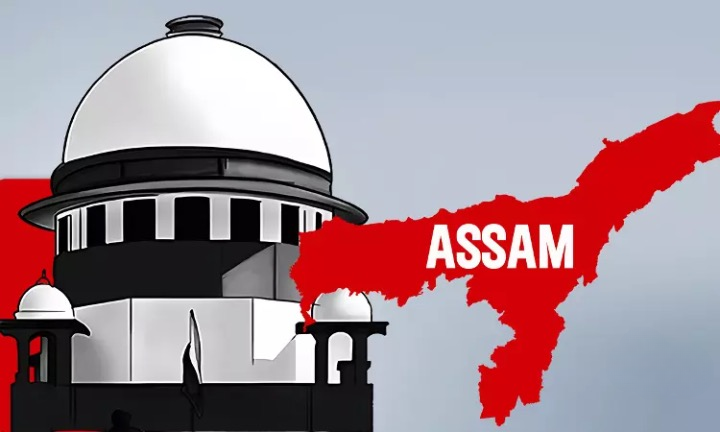
- 08 Dec 2023
Why is it in the News?
The Supreme Court on Thursday asked the Centre and Assam government to provide details on the “estimated inflow of illegal migrants” to Assam and other Northeastern states after March 25, 1971, and the status of border fencing.
News Summary:
- During the hearing of petitions, a five-judge bench of the Supreme Court expressed concerns about the perceived 'unlimited influx' of illegal migrants from Bangladesh, impacting demographics and straining resources for Indian citizens.
- The court questioned the application of Section 6A, granting Indian citizenship benefits to illegal migrants, solely in Assam and not in West Bengal, which shares a larger border with Bangladesh.
- The Supreme Court directed the Home Secretary to submit an affidavit by May 11, 2023, detailing the estimated inflow of illegal migrants, steps taken to address illegal immigration, and specifics on border-fencing extent and timelines.
- The government was also instructed to provide information on illegal immigration along the West Bengal border post on March 25, 1971.
Why Section 6A of the Citizenship Act, 1955 is Under Challenge?
- Presently, a Supreme Court bench is reviewing petitions from indigenous Assamese groups challenging Section 6A of the Citizenship Act.
- These groups assert that the special provision serves as a 'beacon' for illegal entrants to settle in Assam, gain Indian citizenship, and subsequently deprive locals of political, and economic rights, jeopardizing Assamese cultural identity.
- The petitioners question the constitutional validity of Section 6A, claiming it is arbitrary, specifically singles out Assam, violates Article 14, and has led to an influx of illegal migrants from Bangladesh.
- They advocate for establishing 1951 as the cutoff date for inclusion in the National Register of Citizens instead of 1971.
- The primary petitioner, Assam Sanmilita Mahasangha (ASM), argues that Section 6A is discriminatory, arbitrary, illegal, and infringes upon the rights of indigenous Assamese people by establishing a different citizenship cutoff date for Assam compared to the rest of India (July 1948).
What are the Arguments of the Central Government?
- The central government refutes the accusation of unfairly burdening the state with the responsibility of handling illegal migrants, contending that different states of India can be classified differently based on historical and geographical factors.
- According to the government, the classification implied in Section 6-A is founded on intelligible differentia.
- Dismissing claims of arbitrariness, the Centre asserts that the guarantee against non-arbitrariness under Article 14 does not mandate universal application for every law, irrespective of dissimilarity or the nature of the individuals it pertains to.
Global River Cities Alliance with 267 river cities including India, USA and Denmark to be launched on December 10, 2023 (PIB)
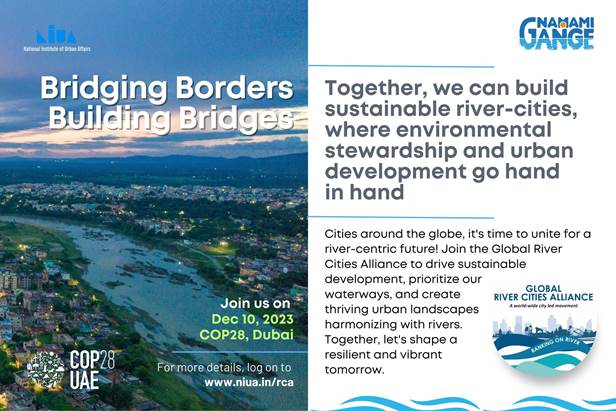
- 08 Dec 2023
Why is it in the News?
The National Mission for Clean Ganga (NMCG) on behalf of River Cities Alliance (RCA), has signed a Memorandum of Common Purpose (MoCP) with the Mississippi River Cities and Towns Initiative (MRCTI), representing 124 cities/towns situated along the banks of the Mississippi River, USA.
What is River Cities Alliance (RCA)?
- The River Cities Alliance (RCA) is a joint initiative of the Department of Water Resources, River Development & Ganga Rejuvenation under the Ministry of Jal Shakti (MoJS) & the Ministry of Housing and Urban Affairs (MoHUA), with a vision to connect river cities and focus on sustainable river centric development.
- Beginning with 30 member cities in November 2021, the Alliance has expanded to 109 river cities across India and one international member city from Denmark.
- 30 cities include Dehradun, Rishikesh, Haridwar, Srinagar, Varanasi, Kanpur, Prayagraj, Farrukhabad, Mirzapur, Mathura, Bijnor, Ayodhya, Patna, Bhagalpur, Begusarai, Munger, Sahibganj, Rajmahal, Howrah, Jangipur, Hugli-Chinsurah, Berhampore, Maheshtala, Aurangabad, Chennai, Bhubaneshwar, Hyderabad, Pune, Udaipur and Vijayawada.
- The Alliance is open to all river cities of India. Any river city can join the Alliance at any time.
- Objective: To provide the member cities with a platform to discuss and exchange information on aspects that are vital for sustainable management of urban rivers, sharing best practices and supporting innovation.
- It focuses on three broad themes- Networking, Capacity Building and Technical Support.
- The Secretariat of the Alliance is set up at the National Institute for Urban Affairs (NIUA) Delhi.
About the National Mission for Clean Ganga (NMCG):
- The Ministry of Jal Shakti, Government of India, established the National Mission for Clean Ganga (NMCG) as a registered society to take proactive measures for preventing, controlling, and abating environmental pollution in the Ganga River.
- Its mission includes ensuring a continuous and adequate flow of water to rejuvenate the river.
- Initially serving as the implementation arm of the dissolved National Ganga River Basin Authority (NGRBA), NMCG aims to achieve effective pollution abatement and river rejuvenation through a river basin approach, promoting inter-sectoral coordination and environmentally sustainable development.
- Post the dissolution of NGRBA in 2016, NMCG continues its objectives through the National Council for Rejuvenation, Protection, and Management of River Ganga, also known as the National Ganga Council.
- The mission focuses on maintaining minimum ecological flows in the Ganga to ensure water quality and sustainable development.
- Structure: NMCG follows a two-tier management structure comprising the Governing Council and the Executive Committee, both led by the Director General.
- The Executive Committee holds the authority to approve projects up to Rs. 1000 crores.
- At the state level, State Programme Management Groups (SPMGs) serve as the implementing arms of State Ganga Committees.
- The Director General of NMCG holds the position of Additional Secretary in the Government of India.
Mining for critical minerals: what is the auction process, and why is it important? (Indian Express)

- 08 Dec 2023
Why is it in the News?
A total of twenty critical mineral blocks are currently open for commercial bidding by private entities. The auction process commenced on November 29, and interested parties have the opportunity to submit bids until January 22 of the following year.
What are Critical Minerals?
- A mineral attains critical status when there is a relatively higher risk of supply shortage and its impact on the economy compared to other raw materials.
- These minerals play a pivotal role in economic development and national security, and their scarcity, concentration in specific geographic locations, or limited extraction/processing options may pose potential vulnerabilities in the supply chain.
- Critical minerals, including lithium, graphite, cobalt, titanium, and rare earth elements, are indispensable for advancements in various sectors such as high-tech electronics, telecommunications, transport, and defense.
- They are integral to strategic value chains, including initiatives for clean technologies (e.g., zero-emission vehicles, wind turbines, solar panels), information and communication technologies (e.g., semiconductors), and advanced manufacturing inputs and materials (e.g., defense applications, permanent magnets, ceramics).
What are the Estimated Reserves of Key Critical Minerals in these Blocks?
- J&K Block: In the J&K block, there is an inferred reserve of 5.9 million tonnes of bauxite, containing over 3,400 tonnes of lithium metal content.
- Additionally, this block boasts more than 70,000 tonnes of titanium metal content.
- Odisha Block: In the Odisha block, the National Institute of Transforming India (NITI) estimates an inferred value of 2.05 million tonnes of nickel ore, equivalent to 3,908 tonnes of nickel metal content.
- Chhattisgarh Block: While the Chhattisgarh block contains lithium and rare earth elements (REEs), no drilling has been conducted to assess total reserves as of yet.
- Other Blocks: Nickel ore reserves have been identified in three blocks, situated in Bihar, Gujarat, and Odisha.
- However, drilling has not been carried out for the Bihar and Gujarat blocks.
How does India presently source these minerals?
- In the fiscal year 2022-23, India imported 2,145 tonnes of lithium carbonate and lithium oxide.
- Lithium carbonate, containing up to 19% lithium, and lithium oxide, typically converted to lithium hydroxide and containing 29% lithium, were part of the imports.
- Additionally, India imported 32,000 tonnes of unwrought nickel and 1.2 million tonnes of copper ore during the same period.
- Notably, India is entirely dependent on imports for its lithium and nickel demand, while for copper, this reliance stands at 93%.
Recent Initiatives by the Indian Government to Boost the Critical Minerals Sector:
- Identification of 30 Critical Minerals: In July 2023, the Indian government released a list of 30 critical minerals, including Antimony, Beryllium, Bismuth, Cobalt, Copper, Gallium, Germanium, Graphite, Hafnium, Indium, Lithium, Molybdenum, Niobium, Nickel, PGE, Phosphorous, Potash, REE, Rhenium, Silicon, Strontium, Tantalum, Tellurium, Tin, Titanium, Tungsten, Vanadium, Zirconium, Selenium, and Cadmium.
- Mining Permissions: The government amended a key law, allowing for the mining of three critical minerals – lithium, niobium, and REEs.
- New royalty rates for critical minerals, aligning with global benchmarks, were specified to attract bidders.
- Geological Survey of India's Exploration: The Geological Survey of India initiated 125 projects in the current fiscal to explore critical mineral reserves.
- Notably, it estimated 5.9 million tonnes of lithium ore in the Salal-Haimna areas (Reasi district, J&K).
- In the preceding eight fiscal years, a total of 625 mineral exploration projects were undertaken.
- Centre of Excellence for Critical Minerals: The Committee on Identification of Critical Minerals recommended establishing a Centre of Excellence for Critical Minerals to formulate policies and incentives for creating a comprehensive value chain of critical minerals in the country.
- Khanij Bidesh India Ltd. (KABIL): A joint venture company, Khanij Bidesh India Ltd. (KABIL), is mandated to identify and acquire overseas mineral assets of a critical and strategic nature, such as lithium and cobalt, to ensure a secure supply.
- Mineral Security Partnership (MSP): India joined the US-led Mineral Security Partnership (MSP), a collaboration of 14 countries aiming to catalyze public and private investment in critical mineral supply chains globally.
How Google DeepMind’s AI breakthrough could revolutionise chip, and battery development (Indian Express)
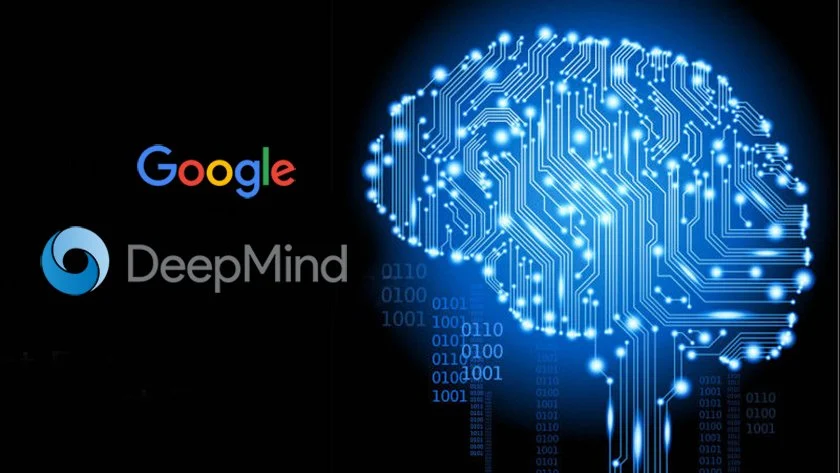
- 08 Dec 2023
Why is it in the News?
Earlier this year, a South Korean laboratory unveiled a significant advancement that holds promise as a potential solution to the energy crisis.
What is Google DeepMind's Project?
- Google has introduced the Graph Networks for Materials Exploration (GNoME), an AI tool developed by DeepMind.
- Leveraging Artificial Intelligence, GNoME successfully predicted the structures of over 2 million new materials.
- The potential applications span diverse sectors, including renewable energy, battery research, semiconductor design, and enhanced computing efficiency.
How does GNoME operate?
- GNoME functions as an advanced graph neural network model (GNN), where input data takes the form of a graph resembling connections between atoms.
- The model employs 'active learning,' initially training on a small specialized dataset and later incorporating new targets for machine learning with human assistance.
- This adaptability suits the algorithm well for material discovery, as it involves identifying patterns not present in the original dataset.
Operational Mechanism of GNoME:
- GNoME employs two pipelines for discovering stable materials with low energy.
- The structural pipeline generates candidates with structures akin to known crystals, while the compositional pipeline follows a more randomized approach based on chemical formulas.
- Outputs from both pipelines undergo evaluation using established Density Functional Theory calculations, contributing to the GNoME database and guiding subsequent rounds of active learning.
- Consequently, the model has significantly improved its precision rate for predicting material stability, reaching around 80%, up from an initial 50%.
- DeepMind's research, encompassing 380,000 stable predictions, is equivalent to nearly 800 years of knowledge, facilitating further breakthroughs in materials discovery for researchers.
What is the Significance of GNoME?
- This breakthrough in artificial intelligence dramatically expands the inventory of 'stable materials,' multiplying it by tenfold in a single stride.
- These materials encompass inorganic crystals crucial for a spectrum of modern technologies, from computer chips to batteries.
- Stability is paramount for these crystals, as any instability could lead to decomposition.
- While the synthesized and tested processes still lie ahead, DeepMind has shared a curated list of 381,000 crystal structures from the predicted 2.2 million, offering a promising foundation for advancing new technologies.
- In comparison, human experimentation over the last decades has revealed the structures of around 28,000 stable materials, catalogued in the Inorganic Crystal Structures Database, representing a noteworthy advancement in material discovery.
Food versus Fuel: What’s happening with Centre’s ethanol blending scheme (Indian Express)
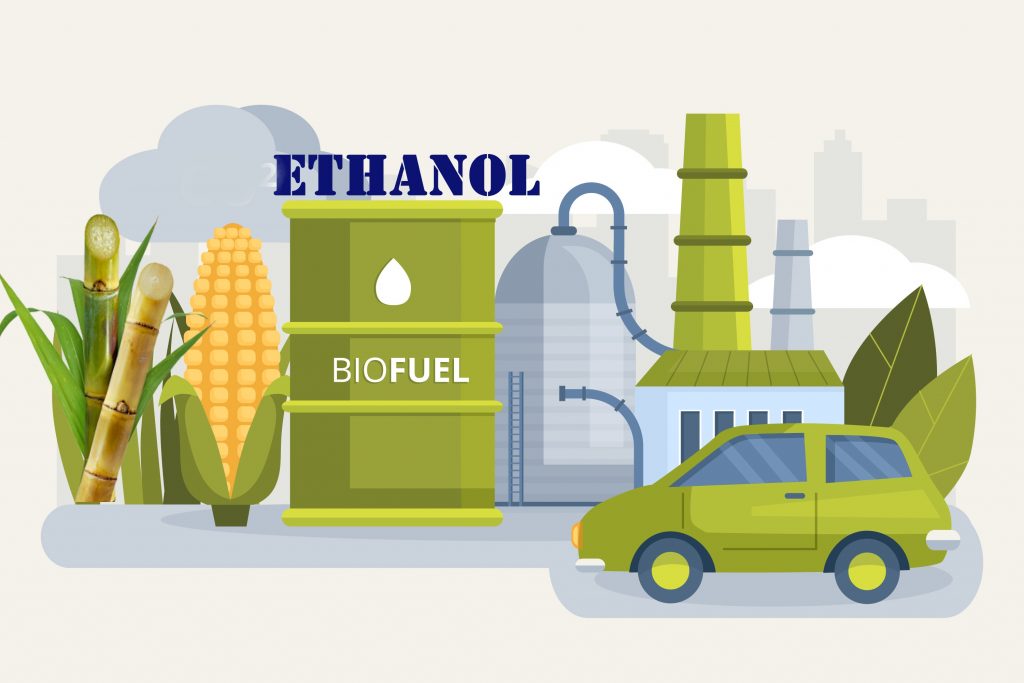
- 13 Dec 2023
Why is it in the News?
After banning sugar exports, the Centre has taken the next step towards augmenting domestic availability – restricting the diversion of the sweetener for ethanol production.
What is the Ethanol Blended Petrol (EBP) Programme?
- The Ethanol Blended Petrol (EBP) programme was launched in January 2003.
- The programme sought to promote the use of alternative and environment-friendly fuels and to reduce import dependency for energy requirements.
- Effective from April 1, 2019, across the nation (excluding UTs of Andaman Nicobar and Lakshadweep islands), Oil Marketing Companies (OMCs) sell petrol blended with up to 10% ethanol.
- The average ethanol blending in petrol has surged from 1.6% in 2013-14 to 11.8% in 2022-23.
- India targets a 20% ethanol blending ratio by 2025, revised from the initial 2030 deadline per the NITI Aayog's roadmap.
- Benefits of the EBP Programme:
- Reducing India’s import bill.
- Mitigating environmental pollution.
- Augmenting farm income.
- Offering a biofuel option with minimal additional investment for manufacturers.
- Challenges for 20% Ethanol Blending:
- Engine modifications are required to process petrol blended with 20% ethanol.
- Ethanol combustion yields no CO2, yet it doesn't address nitrous oxide emissions.
- Concerns about inefficient land use in ethanol production and the substantial water demand for cultivating crops.
- Food security considerations due to uncertainties about future agricultural output.
Why is the Restriction on Sweetener Diversion for Ethanol Production Imposed?
- Sugar Supply Concerns: Closing the 2022-23 sugar year with stocks slightly exceeding 57 lakh tonnes (lt), the lowest since 2016-17 (39.4 lt), raises apprehensions.
- The stock level falls significantly below the peak of 143.3 lt in 2018-19.
- Uncertainties surround the sugar production for the ongoing 2023-24 year, with Maharashtra and Karnataka anticipating substantial declines due to insufficient rainfall and low reservoir water levels in key cane-growing regions.
- Key Implication of the Decision: The recent decision, coupled with the ban on sugar shipments since May 2023, underscores a clear priority.
- Governments emphasize domestic supply over exports, favouring consumers over producers and prioritizing food over fuel.
Strategies to Boost Ethanol Production without Compromising Food Security:
- Diversification of Feedstocks: The government's ethanol policy, marked by favourable pricing and the incorporation of alternative feedstocks such as 2G ethanol sources, has been instrumental.
- The historical dependence on sugarcane-based feedstocks, which constituted 100% of ethanol sources (reduced to 76% in 2022-23), is no longer the sole reliance of the Ethanol Blended Petrol (EBP) program.
About Ethanol:
- Ethanol, an anhydrous ethyl alcohol having the chemical formula of C2H5OH, can be produced from sugarcane, maize, wheat, etc which have high starch content.
- In India, ethanol is mainly produced from sugarcane molasses by fermentation process.
- Ethanol can be mixed with gasoline to form different blends.
- As the ethanol molecule contains oxygen, it allows the engine to more completely combust the fuel, resulting in fewer emissions and thereby reducing the occurrence of environmental pollution.
- Since ethanol is produced from plants that harness the power of the sun, ethanol is also considered a renewable fuel.
This explosion in space, will now form a new solar system! James Webb Telescope captures Cassiopeia A in its latest discovery (Business Today)
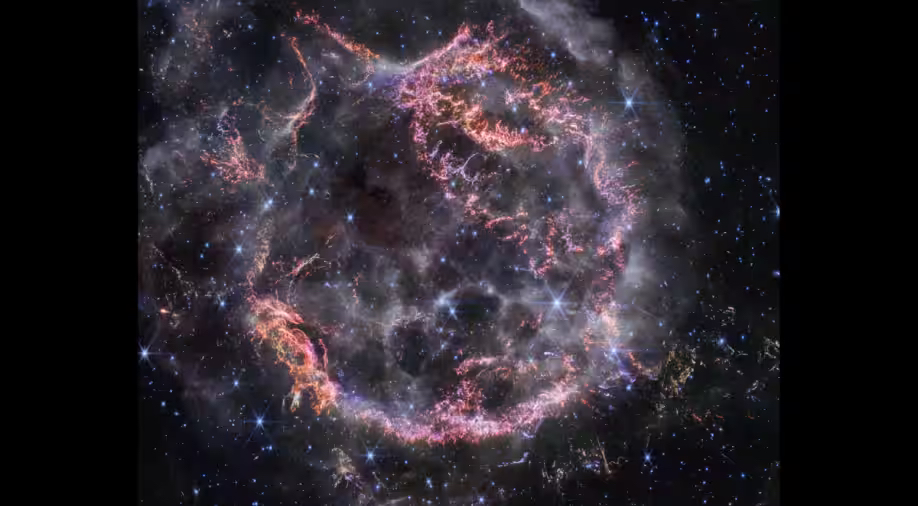
- 13 Dec 2023
Why is it in the News?
The James Webb Space Telescope by NASA has recently documented a striking image of a star that underwent a supernova explosion within the Cassiopeia A (Cas A) supernova remnant.
What is Cassiopeia A?
- Cassiopeia A is the aftermath of a colossal star's explosion approximately 340 years ago, standing as the most recently formed remnant of its kind in our galaxy.
- Renowned for its status as a prototypical type of supernova remnant, it has been the subject of extensive exploration by various ground- and space-based observatories.
- Encompassing around 10 light-years, this remnant resides 11,000 light-years away in the Cassiopeia constellation, offering valuable insights into the intricate dynamics of supernovae.
What is Supernova?
A supernova is a powerful and catastrophic stellar explosion that occurs during the final stages of a massive star's life cycle. This extraordinary event releases an immense amount of energy, temporarily outshining entire galaxies and producing luminosities that can briefly outshine an entire galaxy.
What happens during a supernova explosion?
- Massive stars: Supernovas typically occur in massive stars, at least 8 times the mass of our sun.
- These stars burn brightly and fiercely, fusing hydrogen into helium in their cores.
- Nuclear fusion: As the star ages, it runs out of hydrogen fuel in its core.
- The core starts to collapse inwards due to gravity, while the outer layers expand and cool.
- This increased pressure and temperature trigger the nuclear fusion of heavier elements, like carbon and oxygen, releasing immense energy.
- Bounce and shockwave: The core's collapse eventually leads to a sudden rebound, called the core bounce.
- This bounce creates a shockwave that rips through the star's outer layers, ejecting them outwards in a violent explosion.
Types of supernovae: There are two main types of supernovae:
- Core-collapse supernovae: The explosion blows away the star's outer layers, leaving behind a neutron star or, if the mass is even greater, a black hole.
- Type Ia supernovae: These occur in binary systems where a white dwarf, the remnant of a low-mass star, siphons material from its companion star.
- This builds up mass on the white dwarf until it reaches a critical point and undergoes thermonuclear runaway, leading to a massive explosion.
Significance of supernovae: Supernovae play a crucial role in the universe's evolution.
- Enrich the interstellar medium with heavy elements: The ejected material from supernovae is rich in elements heavier than hydrogen and helium, which are essential for the formation of new stars and planets.
- Trigger star formation: The shockwaves from supernovae can compress surrounding gas clouds, triggering the formation of new stars.
- Create black holes and neutron stars: The most massive stars leave behind black holes or neutron stars, incredibly dense objects with fascinating properties.
Calling for caution, PM flags need for ethics, democratic values in AI (Indian Express)
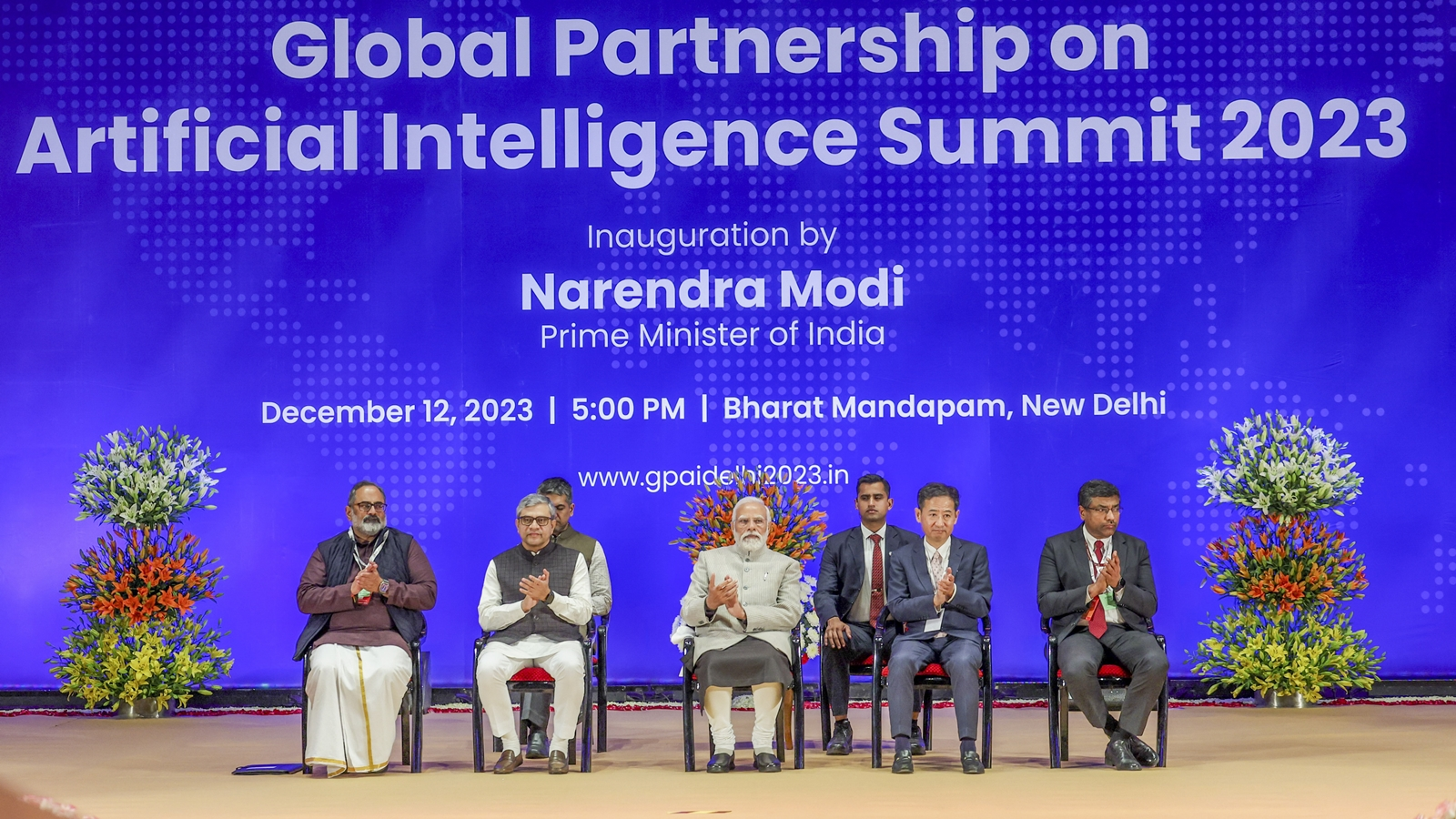
- 13 Dec 2023
Why is it in the News?
India is negotiating with GPAI member countries for a consensus on a declaration document on the proper use of AI, the guardrails for the technology, and how it can be democratised.
Context:
- India is currently hosting the 4th Global Partnership on Artificial Intelligence (GPAI) Summit at Bharat Mandapam in New Delhi, scheduled from December 12-14, 2023.
- The first three GPAI summits were held in Montreal, Paris and Tokyo, respectively.
- Prime Minister Modi emphasized the dual nature of AI, portraying it as a significant development tool for the 21st century but also highlighting potential risks.
- He called for a global framework to ensure responsible AI use and urged caution in deployment.
- Addressing concerns like deepfakes, cybersecurity, and cyber-terrorism, he proposed an audit mechanism categorizing AI tools based on their capabilities.
- PM Modi is negotiating with GPAI member countries for a consensus on a declaration document outlining proper AI use, technology guardrails, and democratization.
- Recognizing AI's role in economic growth, he announced India's upcoming AI mission, focusing on AI computing power for startups and innovators, with applications in agriculture, health, and education.
- The mission aims to extend AI skills to Tier 2 and Tier 3 cities.
- PM Modi stressed ethical AI use as a guiding principle and suggested the inclusion of development and deployment protocols for high-risk AI systems in the global framework.
- He underscored AI's potential for connecting people and envisioned its ethical use in promoting economic growth, equality, and social justice.
About the Global Partnership on Artificial Intelligence (GPAI) Summit:
- The Global Partnership on Artificial Intelligence (GPAI) Summit is a three-day event starting December 12, which will see representatives from 28 member countries and the European Union.
- India is the Lead Chair for the alliance in 2024.
- The founding members of the GPAI: are Australia, Canada, France, Germany, India, Italy, Japan, Mexico, New Zealand, the Republic of Korea, Singapore, Slovenia, the UK, the US, and the EU.
- Prime Minister Narendra Modi inaugurated the summit on December 12.
- The objective of this summit is to bridge the gap between theory and practice on AI by supporting cutting-edge research and applied activities on AI-related priorities.
- It will feature a number of seminars covering a wide range of subjects, including AI and global health, education and skill development, AI and data governance, and machine learning workshops.
- More than 150 speakers from various nations will be present at the summit, including more than fifty GPAI experts.
- Moreover, leading global AI innovators such as Intel, Google, Meta, Microsoft, etc will be taking part in these events.
- Additionally, start-ups and students who win under the YUVA AI programme will present their AI models and solutions.
Missiles from rebel territory in Yemen miss a ship near key Bab el-Mandeb Strait, US official says (TOI)
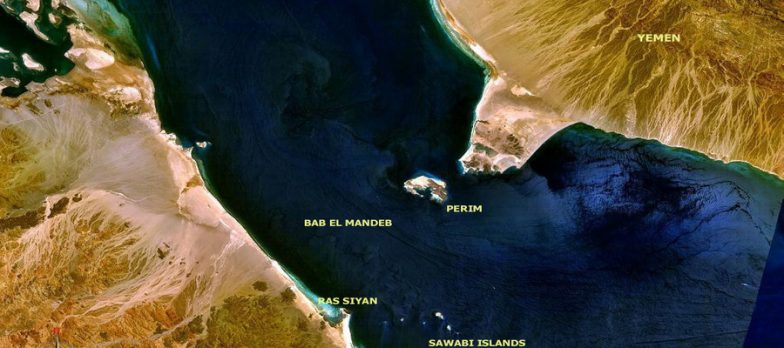
- 13 Dec 2023
Why is it in the News?
Two missiles fired by Yemen's Houthi rebels missed a commercial tanker near the Bab el-Mandeb Strait.
Context:
- Two missiles fired from territory held by Yemen's Houthi rebels missed a commercial tanker near the key Bab el-Mandeb Strait on Wednesday.
- An American warship also shot down a suspected Houthi drone flying in its direction during the incident.
- The ship was carrying Indian-manufactured jet fuel and was heading for either Rotterdam in the Netherlands.
- It was coming from Mangalore in southern India and had an armed security crew on board.
- The Houthis have carried out a series of attacks on vessels in the Red Sea and launched drones and missiles targeting Israel.
About Bab el-Mandeb Strait:
- The Bab-el-Mandeb is a strait between Yemen on the Arabian Peninsula, and Djibouti and Eritrea in the Horn of Africa.
- It connects the Red Sea to the Gulf of Aden.
- The Bab el-Mandeb Strait is a chokepoint between the Horn of Africa and the Middle East and is a strategic link between the Mediterranean Sea and the Indian Ocean.
- It is one of the world's most important routes for global seaborne commodity shipments, particularly crude oil and fuel.
- The Perim Island divides the strait into two channels, of which the eastern is known as the Bab Iskender (Alexander's Strait), while the western is known as Dact-el-Mayun.
What is the Horn of Africa?
- The Horn of Africa, the world's fourth-largest peninsula, is located in Northeast Africa, extending eastwards from the African mainland and bordered by the Red Sea, Guardafui Channel, Gulf of Aden, and Indian Ocean.
- Positioned equidistantly from the equator and the Tropic of Cancer, it encompasses diverse landscapes, including the Ethiopian Plateau, Ogaden desert, and Eritrean and Somalian coasts.
- The Horn of Africa includes the countries of Djibouti, Eritrea, Ethiopia, and Somalia.
- This region has experienced historical complexities, including imperialism, neo-colonialism, the Cold War, ethnic tensions, intra-African conflicts, poverty, disease, and famine.
India’s first Pompe disease patient passes away: What is this rare genetic disorder? (Indian Express)
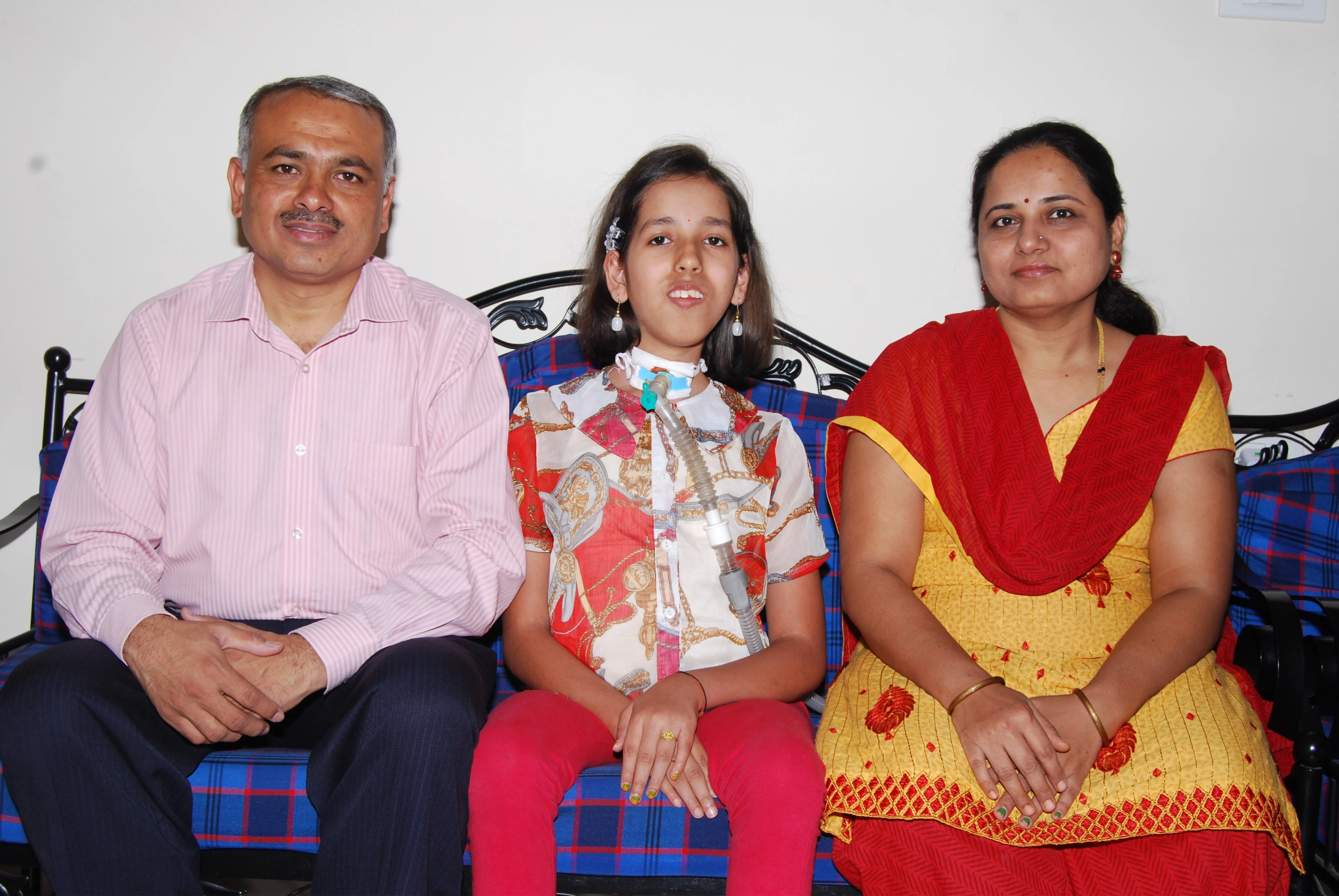
- 13 Dec 2023
Why is it in the News?
Nidhi Shirol, India’s first Pompe disease patient, passed away last month at the age of 24 years after battling the disease. She spent the last six years in a semi-comatose state.
What is Pompe Disease?
- Pompe disease is a rare genetic disorder caused by a deficiency of the enzyme acid alpha-glucosidase (GAA) and is also known as Glycogen Storage Disease Type II.
- This enzyme is crucial for breaking down glycogen into glucose within the lysosomes of cells.
- Its prevalence estimates range from 1 in 40,000 to 1 in 300,000 births and occur across diverse ethnicities and populations.
- The age of onset and severity can vary, leading to a spectrum of clinical presentations.
How does Pompe disease affect an individual?
The severity of the condition and the progression of symptoms may differ among individuals. Some key symptoms are:
- Muscle weakness: Progressive muscle weakness is a primary feature of Pompe disease.
- It affects both skeletal and smooth muscles, leading to difficulties in mobility and daily activities.
- Weakness in the respiratory muscles can result in breathing difficulties, especially during physical exertion or even while lying down.
- Motor skill delay: Children with the disease may experience delays in achieving motor milestones, such as sitting, crawling, and walking.
- The degree of motor skill delay can vary, and some individuals may never attain certain motor milestones.
- Degenerative impact on bones: Prolonged muscle weakness and reduced mobility can have a degenerative impact on bones, leading to joint contractures and skeletal deformities.
- Respiratory complications: The weakening of respiratory muscles, including the diaphragm, can have an impact.
- Patients may experience shortness of breath, respiratory infections, and in severe cases, respiratory failure.
- Cardiac involvement: In some cases, Pompe disease can affect the heart muscles, leading to complications.
- Symptoms such as heart palpitations, fatigue, and chest pain, may manifest.
- Hypertrophic cardiomyopathy: Pompe disease can cause hypertrophic cardiomyopathy, characterised by the thickening of the heart muscle walls.
- This can lead to impaired heart functions and cardiovascular symptoms.
- Implications for daily living: Patients may face challenges in performing daily activities independently due to muscle weakness and respiratory limitations.
- Assistive devices such as wheelchairs and respiratory support equipment may become necessary.
How is Pompe disease diagnosed?
- Diagnosing Pompe disease involves a multi-faceted approach.
- Enzyme assays are conducted to measure the activity of acid alpha-glucosidase (GAA), the deficient enzyme.
- Genetic testing identifies mutations in the responsible GAA gene.
- Clinical evaluations consider the patient’s symptoms and medical history.
- Enzyme tests, often performed on blood or skin cells, provide crucial insights into GAA deficiency.
- Genetic analysis confirms the presence of specific mutations associated with Pompe Disease.
- The combination of these diagnostic tools enables healthcare professionals to accurately identify and confirm the disease, helping achieve timely intervention and management.
Is Pompe disease curable?
- While there is currently no cure for Pompe disease, treatment options are available to manage symptoms and improve the patient’s quality of life.
- Enzyme Replacement Therapy (ERT) is a standard treatment, involving the infusion of the missing enzyme to alleviate glycogen buildup.
Data | Sharp rise in Indians illegally crossing U.S. northern border from Canada (The Hindu)

- 15 Dec 2023
Why is it in the News?
In the last ten years, the number of unauthorized Indian migrants entering the U.S. has surged significantly, climbing from a mere 1,500 a decade ago to an astonishing 96,917 in 2023, as reported by the U.S. Customs and Border Protection.
What are the Implications for India Amidst the Surge in Illegal Migrants?
- Bilateral Relations: The surge in illegal migration poses potential challenges to bilateral relations between India and the USA, impacting areas such as trade negotiations, security cooperation, and strategic partnerships.
- Economic Factors: India faces the risk of a brain drain, as skilled individuals seek illegal entry, potentially affecting sectors with a demand for skilled labour and impacting the country's economy.
- The outflow of skilled and educated individuals through illegal migration can have adverse effects on India's economy, leading to a depletion of talent and expertise.
- Labour Market Challenges: The departure of skilled or semi-skilled workers may create labour shortages in specific sectors, affecting India's workforce and economic productivity.
- Policy Repercussions: India may need to institute stringent policies to address the root causes of illegal migration, potentially diverting resources and attention from other developmental priorities.
What are the Causes Behind the Surge in Illegal Indian Migrants to the USA?
- Pull Factors: The USA's reputation for offering improved employment prospects, higher wages, and career advancement acts as a significant attraction for migrants.
- The allure of quality education and prestigious academic institutions in the USA attracts students and families in search of educational opportunities.
- The desire to reunite with family members or relatives already settled in the USA motivates some migrants to seek illegal entry for proximity to loved ones.
- Push Factors: Numerous push factors, including limited job opportunities and economic prospects in India, drive individuals to seek better employment opportunities abroad.
- Social conflicts or a lack of confidence in India's governance structure may prompt some individuals to search for a more stable environment elsewhere.
- Visa Backlogs and Alternative Routes: Smugglers adapt their methods, providing sophisticated services to facilitate illegal entry into America.
- Prolonged visa backlogs prompt individuals to explore alternative, albeit illegal, pathways to enter the USA due to extended waiting times and limited legal entry options.
- Global Migration Trends: The overall increase in global migration post-pandemic contributes to this surge as individuals seek improved opportunities and security in different countries.
- Misinformation: Social media and deceptive travel agencies disseminate misinformation, misleading desperate migrants and encouraging them to embark on perilous journeys guided by multiple facilitators across continents.
- Desperate migrants may undertake complex, multi-leg journeys through various continents and countries, facing numerous risks and challenges along the way.
What can be Done?
Prioritizing economic stability, job creation, and social welfare programs to alleviate distress and offer improved opportunities within India. Initiating diplomatic dialogues to comprehend and address concerns that contribute to migration, fostering collaboration with other nations to safeguard the rights of migrants.
In a monthly report, the IEA projected that India's oil product demand growth would slow to 2.5% next year from 4.1% in 2023. (ET)

- 15 Dec 2023
Why is it in the News?
The International Energy Agency (IEA) said recently that the "explosive growth" in Indian oil product consumption may be coming to an end.
About International Energy Agency:
- The International Energy Agency (IEA) is an autonomous intergovernmental organization founded in 1974 in Paris, France.
- Its primary focus revolves around energy policies, emphasizing economic development, energy security, and environmental protection, collectively known as the '3 E’s of IEA.'
- The IEA Clean Coal Centre is dedicated to providing independent information and analysis on making coal a cleaner energy source in line with UN Sustainable Development Goals.
- Originating in response to the oil crisis of 1973-1974, the IEA's mandate has evolved to include tracking global energy trends, advocating sound energy policies, and fostering international energy technology cooperation.
- Mission: The IEA's mission is to ensure reliable, affordable, and clean energy for its member countries and beyond.
- Focus Areas: Key focus areas include energy security, economic development, environmental awareness, and global engagement.
- The IEA collaborates closely with non-member countries, particularly major producers and consumers, to find solutions to shared energy and environmental concerns.
- IEA’s Membership: The IEA is made up of 30 member countries.
- It also includes eight association countries. Four countries are seeking accession to full membership, Chile, Colombia, Israel and Lithuania.
- A candidate country to the IEA must be a member country of the Organisation for Economic Co-operation and Development (OECD).
- Membership Criteria:
- Adequate Reserves: Prospective member countries must maintain crude oil and/or product reserves equivalent to 90 days of the previous year's net imports.
- These reserves, accessible to the government even if not directly owned, should be readily deployable to address disruptions in the global oil supply.
- Demand Restraint Program: Candidates are required to implement a demand restraint program aimed at reducing national oil consumption by up to 10%.
- Emergency Response Capability: Member countries must have legislation and organizational frameworks in place to operate Coordinated Emergency Response Measures (CERM) on a national basis.
- Transparent Reporting: Legislation and measures should be established to ensure that all oil companies under the jurisdiction of the candidate country promptly report information upon request.
- Collective Action Capability: Measures must be in place to guarantee the country's capability to contribute its share in collective actions initiated by the International Energy Agency (IEA).
- Adequate Reserves: Prospective member countries must maintain crude oil and/or product reserves equivalent to 90 days of the previous year's net imports.
- India joined this organization in 2017 as an Associate member.
- However, in 2021, the International Energy Agency (IEA) invited India, the world’s third-largest energy consumer, to become its full-time member.
- Major reports published by the IEA include the World Energy Outlook, World Energy Investment Report, World Energy Statistics, World Energy Balances, Energy Technology Perspectives, and the India Energy Outlook Report.
NASA all set to launch of PACE mission to study air quality, key climate factors and more (NASA)
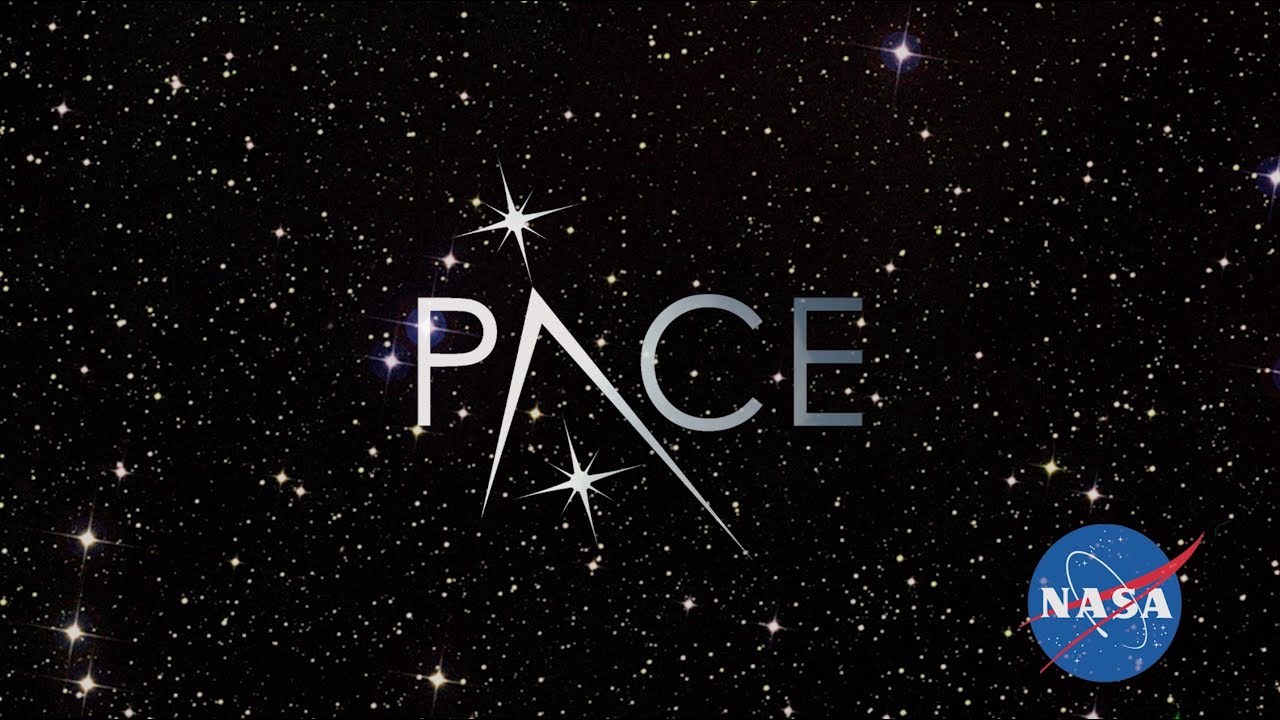
- 15 Dec 2023
Why is it in the News?
NASA is ready to enhance our understanding of Earth’s atmosphere with the upcoming Plankton, Aerosol, Cloud, Ocean Ecosystem (PACE) mission, scheduled for launch in early 2024.
What is NASA's PACE Mission?
- The mission will leverage advanced polarimeters to investigate the intricate interactions of light, aerosols, and clouds, enhancing our understanding of their impact on both air quality and climate.
- Beyond aerosol analysis, the PACE mission will delve into the study of ocean colour.
- At its core, the Ocean Colour Instrument (OCI) serves as the primary science instrument for PACE, designed to measure the ocean's colour across a spectrum ranging from ultraviolet to shortwave infrared.
- The mission includes two polarimeters:
- The Spectro-polarimeter for Planetary Exploration (SPEXone) and
- The Hyper Angular Research Polarimeter (HARP2)
- Working in tandem, these instruments offer complementary spectral and angular sampling, ensuring polarimetric accuracy and extensive spatial coverage.
- This integrated approach aims to deliver enhanced atmospheric correction and a comprehensive dataset on aerosols and clouds, surpassing the capabilities of OCI alone.
- The collaborative payload of OCI, SPEXone, and HARP2 is poised to achieve significant breakthroughs in aerosol-cloud-ocean research.
What are Aerosols and their Effect?
- Aerosols are comprised of liquid or solid particles suspended in a gaseous or liquid medium.
- In the atmosphere, these particles are predominantly found in the lower layers (< 1.5 km) since aerosol sources are terrestrial.
- However, specific aerosols may extend into the stratosphere, particularly those ejected by volcanoes at high altitudes.
- Sources of Aerosols:
- Natural Sources: Generated from breaking waves (sea salt), wind-blown mineral dust from the surface, and volcanic emissions.
- Anthropogenic Aerosols: These include sulphate, nitrate, and carbonaceous aerosols, primarily originating from fossil fuel combustion.
- Effects of Aerosols:
- Impact on Atmospheric Chemistry.
- Reduction of Visibility.
- Significance for Air Quality and Human Health: Aerosols can adversely affect the heart and lungs.
- Role as Nuclei: Serve as nuclei for cloud droplets or ice crystals in ice clouds.
Mumps outbreak: Worrying symptoms to watch out for, preventive tips (India TV)
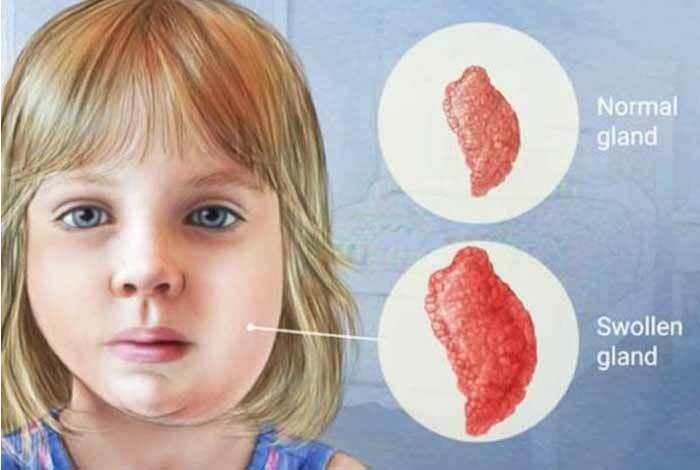
- 15 Dec 2023
Why is it in the News?
A mumps outbreak has recently been reported in several states across the country, causing concern among public health officials.
What is Mumps Disease?
- Mumps is a contagious disease caused by the mumps virus, which belongs to the paramyxovirus family.
- It typically involves painful swelling in the parotid salivary glands, located on the sides of the face below and in front of the ears.
- These swollen glands often give the infected person a characteristic "chipmunk-cheek" appearance.
- Humans are the only known host for the mumps virus, which is spread via direct contact or by airborne droplets from the upper respiratory tract of infected individuals.
- Transmission of mumps: Mumps is spread through contact with the saliva or respiratory droplets of an infected person. This can happen through coughing, sneezing, kissing, sharing utensils, or close contact.
- Symptoms:
- Mumps typically manifest after an incubation period of 2 to 4 weeks, starting with nonspecific symptoms like myalgia, headache, malaise, and low-grade fever.
- Within days, these initial symptoms progress to the swelling of the parotid salivary glands, either unilaterally or bilaterally, with other salivary glands affected in 10% of cases.
- Prevention: The best way to prevent mumps is to get vaccinated with the MMR (measles, mumps, and rubella) vaccine.
- The MMR vaccine is safe and effective for most people.
- Other preventive measures include practising good hand hygiene, avoiding close contact with sick people, and covering your coughs and sneezes.
- Treatment: There is no specific treatment for mumps. Most people recover on their own within a few weeks.
- Treatment focuses on relieving symptoms, such as with pain relievers and fever reducers.
- In general, mumps is a mild, self-limiting disease that resolves without lasting effects.
- However, complications can arise, including encephalitis or sensorineural deafness.
- Orchitis, a painful inflammation of the testes, occurs in approximately 20% of young adult males who contract mumps.
The Hindu Parliament security breach | 14 Opposition MPs suspended from House amid face-off (LiveMint)
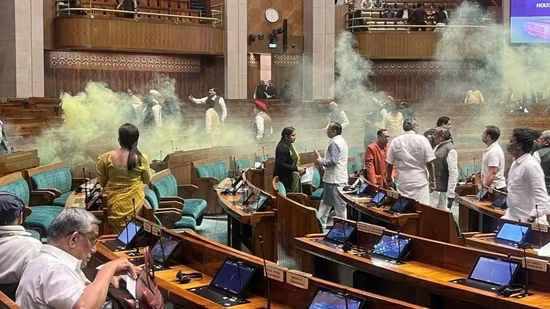
- 15 Dec 2023
Why is it in the News?
Fourteen MPs have been suspended for "unruly conduct" as stormy scenes played out in Parliament in the wake of the massive security breach recently.
Context:
- A total of 14 MPs, 13 from Lok Sabha and one from Rajya Sabha, were suspended from Parliament on Thursday for the remainder of the Winter Session.
- This follows after stormy scenes played out in Parliament on Thursday, December 14, in the wake of the massive security breach a day before.
- Earlier in the day, TMC member Derek O'Brien was suspended from the Rajya Sabha for the remainder of the Winter session for "unruly behaviour" and "misconduct".
Suspension of MPs:
- The Presiding Officer, whether the Speaker of the Lok Sabha or the Chairman of the Rajya Sabha, plays a crucial role in maintaining order for the smooth functioning of the House.
- Empowered to uphold proper proceedings, the Speaker/Chairman has the authority to compel a Member to withdraw from the House, ensuring the orderly conduct of parliamentary affairs.
What are the Rules under which the Presiding Officer/Chairman acts?
- In Lok Sabha: Rule 373 of the Rules of Procedure and Conduct of Business empowers presiding officers to direct an MP to withdraw for disorderly conduct.
- The suspended Member must remain absent for the remainder of the day's sitting.
- Rules 374 and 374A are invoked for more persistent disruptions.
- Rule 374 allows the Speaker to name legislators for continued disruptions, leading to a motion for suspension not exceeding the session's remainder.
- Rule 374A, added in December 2001, facilitates automatic suspension for five days or the remaining session part.
- In Rajya Sabha: Rule 255 grants the Chairman the authority to immediately direct withdrawal for disorderly conduct.
- Rule 256 enables the Chairman to name members persistently disregarding the Chair's authority or abusing Council rules.
- The House may then pass a motion for suspension not exceeding the session's remainder.
- Unlike Lok Sabha, Rajya Sabha cannot suspend members without a formal motion.
Judicial Oversight in MP Suspension Cases:
- While Article 122 of the Indian Constitution shields parliamentary proceedings from judicial review, there are instances of courts intervening in legislative procedures.
- In a case involving the Maharashtra Legislative Assembly's 2021 Monsoon Session, where 12 BJP MLAs were suspended for a year, the Supreme Court stepped in.
The Court ruled that the assembly's resolution had legal limitations and was only applicable for the duration of the Monsoon Session, underscoring the judiciary's role in assessing the legality and effectiveness of legislative actions.
Rashtriya Gokul Mission (RGM) (The Hindu)
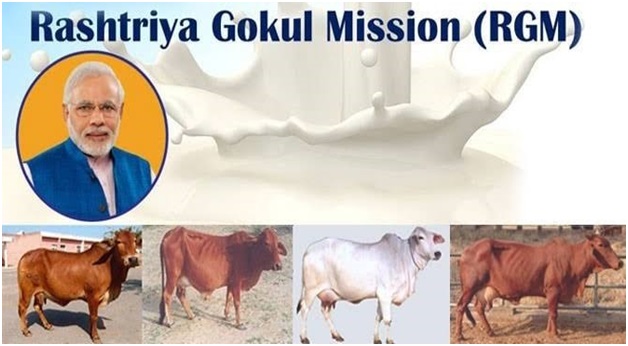
- 02 Nov 2023
Why in the News?
The Centre has decided to deploy National Level Monitors (NLM) to oversee the implementation of its livestock schemes including the National Livestock Mission and Rashtriya Gokul Mission.
About Rashtriya Gokul Mission (RGM):
- The Rashtriya Gokul Mission (RGM) has been implemented for the development and conservation of indigenous bovine breeds since December 2014.
- The scheme is important in enhancing milk production and productivity of bovines to meet the growing demand for milk and making dairying more remunerative to the rural farmers of the country.
- The scheme is also continued under the umbrella scheme Rashtriya Pashudhan Vikas Yojna from 2021 to 2026 with a budget outlay of Rs.2400 crore.
- The RGM will result in enhanced productivity and benefit of the programme, percolating to all cattle and buffaloes of India, especially with small and marginal farmers.
- This programme will also benefit women in particular since over 70% of the work involved in livestock farming is undertaken by women.
Objectives:
- To enhance the productivity of bovines and increase milk production in a sustainable manner using advanced technologies.
- To propagate the use of high genetic merit bulls for breeding purposes.
- To enhance Artificial insemination coverage through strengthening the breeding network and delivery of Artificial insemination services at farmer’s doorstep.
- To promote indigenous cattle & buffalo rearing and conservation in a scientific and holistic manner.
India’s First ‘City Of Literature’ (NewsOnAir)

- 02 Nov 2023
Why in the News?
Recently India-born author Nandini Das is the winner of 2023 British Academy Book Prize for Global Cultural Understanding.
About the British Academy Book Prize:
- The British Academy Book Prize, formerly known as the Nayef Al Rodhan Prize for Global Cultural Understanding, is a prestigious annual award given to the best non-fiction book that, in the opinion of the judges, contributes to global cultural understanding for a wider public audience.
- The prize was established in 2013 in partnership with Professor Nayef Al-Rodhan and is worth £25,000.
- The British Academy is the UK's national academy for the humanities and social sciences, and the prize is one of its most prestigious awards.
- It is a testament to the importance of these disciplines in helping us to understand ourselves and the world around us.
- Eligible books must be non-fiction, and come from the subjects that fall within the humanities and social sciences, from archaeology, history and psychology to philosophy, languages and cultural studies.
- Nandini Das who is a Professor in the English faculty at the University of Oxford, won the award for her book ‘Courting India: England, Mughal India and the Origins of Empire’
Debrigarh Wildlife Sanctuary (The Hindu)
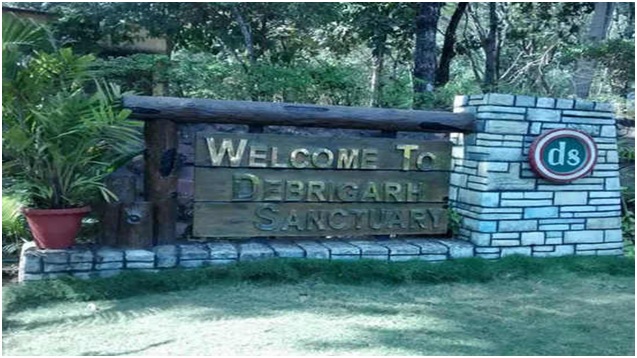
- 02 Nov 2023
Why in the News?
Recently, in the Bargarh area of Odisha's Debrigarh Wildlife Sanctuary, two rare and elusive wild dogs, known as Dholes, have been spotted.
About Debrigarh Wildlife Sanctuary:
- Debrigarh Wildlife Sanctuary is Located between the Hirakud Dam (on the Mahanadi River) and the Reservoir in Odisha.
- It was declared a wildlife sanctuary in 1985.
- It's also famous because the freedom fighter Veer Surendra Sai used 'Barapathara' within the sanctuary as his base during his struggle against the British.
- It covers an area of 347 square kilometres and is home to a variety of wildlife, including Indian Bison, Wild Boars, Sambhar, and Peacocks.
- The dry deciduous forest attracts many migratory birds during the winter season.
- The sanctuary also houses the endangered four-horned antelope, known as Chousingha.
- Additionally, it's internationally significant due to its notable population of Leopards, Bisons, and Chousingha.
State Food Safety Index (SFSI) (Indian Express)

- 02 Nov 2023
Why in the News?
Recently, the Food Safety and Standards Authority of India (FSSAI) published the State Food Safety Index in which 15 out of 20 states recorded lower 2023 scores compared to 2019.
About the State Food Safety Index:
- Since 2019, FSSAI has released the State Food Safety Index (SFSI) each year on June 7 on the occasion of World Food Safety Day.
- SFSI scores are given out of a total of 100 points that are calculated based on five parameters with different weightages:
- Human Resources and Institutional Data
- Compliance
- Food Testing Infrastructure
- Training and Capacity Building
- Consumer Empowerment.
- In the 2023 index, a new parameter called ‘Improvement in SFSI Rank’ was added, which assesses improvement in each state’s rank from the year before.
- The primary goal of this index is to ensure that citizens have access to safe and nutritious food.
- This index is a dynamic and comprehensive system that offers an objective way to assess food safety across all states and UTs.
- States and UTs are categorized into three groups: large states, small states, and UTs, for evaluation and comparison.
Key findings from the report:
- 19 out of 20 large states — including Maharashtra, Bihar, Gujarat and Andhra Pradesh — recorded a drop in their 2023 scores from 2019.
- The most substantial drop was observed in the 'Food Testing Infrastructure' category, with states like Maharashtra, Bihar, Andhra Pradesh, and Chhattisgarh receiving lower scores in this aspect.
- Gujarat, Madhya Pradesh, and Jharkhand also had reduced scores in the 'Compliance' category.
- In the 2023 index, the 'Human Resources and Institutional Data' category was given the third-highest importance, accounting for 18% of the evaluation (it was 20% in previous years).
- The only category that showed notable improvement was 'Training and Capacity Building,' which was given the least importance, 8%, in the 2023 index (compared to 10% in previous years).
Future Leaders Scholarship Programme (Indian Express)
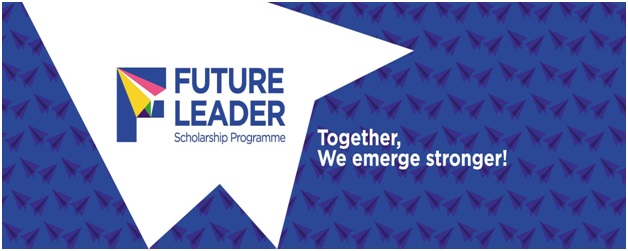
- 02 Nov 2023
Why in the News?
Imperial College London recently announced a new scholarship programme for Indian students that aims to nurture the country’s most talented Master’s scholars over the next three years.
About the Future Leaders Scholarship Programme:
- Imperial College London unveils the Future Leaders Scholarship Programme for Indian students.
- It aims to support 30 highly talented Master's students in India for the next three years.
- This scholarship will cover all tuition and living expenses.
- It is available for Master's students in fields such as engineering, natural sciences, business, and medical research.
- Notably, half of the scholarships are set aside for female scholars.
- The program creates an opportunity for India's brightest students to further their education and gain valuable experiences at a top international university.
- In addition to this scholarship, the university has partnered with the UK government's Chevening Scholarships programme to sponsor an extra three Master's scholars from India in the next three years.
One Nation, One Registration Platform (The Hindu)

- 01 Nov 2023
Why in the News?
The National Medical Commission (NMC)will launch its “One Nation, one registration platform’‘ for doctors across the country
About One Nation, One Registration Platform:
- The National Medical Commission (NMC) will launch a patch trial of the National Medical Register (NMR), in which physicians will receive a unique identification number and, based on their location, be able to apply for a license to practice in any State within the next six months.
- The change was announced by the commission in a gazette notification earlier this year under the title "Registration of Medical Practitioners and Licence to Practice Medicine Regulations, 2023."
- The NMR will receive the data of almost 14 lakh doctors who are currently registered in the system.
- Objectives: The goal is to supply undergraduate students on the NMR with a masked ID, and based on when they complete their course, the ID is unmasked and assigned.
- It will eliminate duplication and red tape while also providing the public with access to information on any physician practising in India.
Features of the NMR:
- The public will have access to the NMR via the NMC website, which will take the role of the current Indian Medical Register (IMR). It will provide detailed information about registered doctors, such as:
- Unique Identification Number (UID): Each doctor will be assigned a unique identification number.
- Registration Number: The doctor’s registration number for verification.
- Qualifications: Information about the doctor’s educational qualifications.
- Specialization: The doctor’s area of expertise.
- Name and Place of Work: Details of the doctor’s name and workplace.
- Institute/University: The name of the institution or university where the qualifications were obtained.
Tamil Lambadi Embroidery (The Hindu)
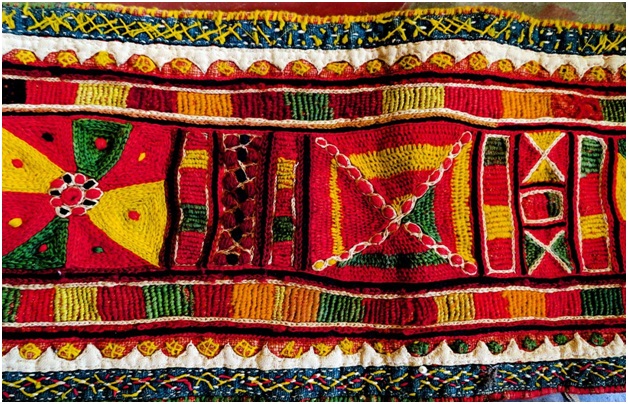
- 01 Nov 2023
Why in the News?
For almost 60 years, the Porgai Artisan Association Society has been producing and distributing embroidered clothing in an effort to raise awareness of the art form and ensure that it is passed down to future generations.
About Tamil Lambadi Embroidery:
- The Lambadi community has a long-standing tradition of practising Lambadi embroidery.
- This craft is used to embellish their clothing and household items and it holds significant cultural and identity value for the Lambadis.
- Traditionally, Lambadi women use colourful cotton threads to create intricate embroidery on cotton and silk fabrics.
- Embroidery Designs: The traditional Lambadi embroidery designs are characterized by geometrical patterns, including squares, rectangles, and circles.
- These designs have also been influenced by elements from the local environment, such as forests, birds, fruits, and flowers.
Facts About the Lambadi Community:
- They are also known as Lambadis or Banjaras.
- Historically they are nomadic tribes, originating from Afghanistan and settling in regions including Rajasthan, Karnataka, Andhra Pradesh, Madhya Pradesh, Gujarat, and Maharashtra.
- They also assisted Mughal Emperor Aurangzeb in transporting goods in the 17th century.
- Speak 'Gor Boli' or 'Lambadi,' which is often written in Devanagari or local languages.
- Many members of the Lambani community are bilingual or multilingual to communicate in the predominant language of their region in India.
- The elderly women within the Lambadi community continue to wear the Petia, a traditional five-piece dress.
- The Petia is made using Mushru silk from Kutch, showcasing the enduring connection to their heritage and craftsmanship.
Black Stork (TOI)
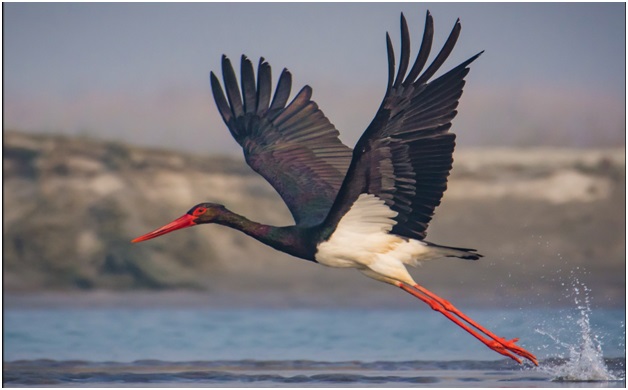
- 01 Nov 2023
Why in the News?
For the first time, a Black Stork, a species rarely seen, has been spotted in the Hastinapur Wildlife Sanctuary in Uttar Pradesh recently.
About Black Stork:
- The black stork (Ciconia nigra) is a large bird in the stork family Ciconiidae.
- It is usually found in marshy areas, rivers or inland waters.
- It is a long-distance migrant, with European populations wintering in tropical Sub-Saharan Africa, and Asian populations in the Indian subcontinent.
- The black stork is considered to be a species of least concern by the International Union for Conservation of Nature, but its actual status is uncertain.
- Despite its large range, it is nowhere abundant, and it appears to be declining in parts of its range, such as in India, China and parts of Western Europe, though increasing in others such as the Iberian Peninsula.
- Various conservation measures have been taken for the black stork, like the Conservation Action Plan for African black storks by Wetlands International.
- It is also protected under the African-Eurasian Waterbird Agreement and the Convention on International Trade in Endangered Species of Wild Fauna and Flora.
Light Combat Helicopter (LCH) 'Prachand' (The Hindu)
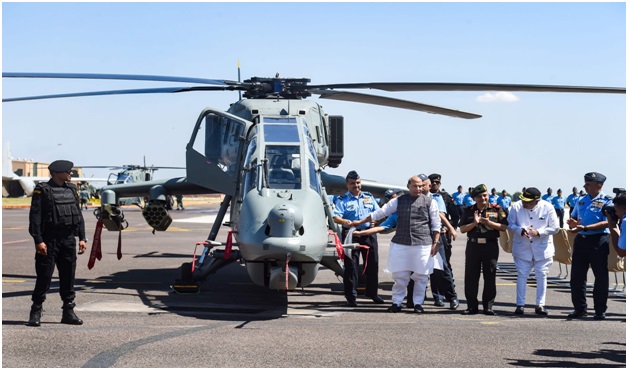
- 01 Nov 2023
Why in the News?
The Indian Army's Light Combat Helicopter (LCH) Prachand has conducted the first-ever day-and-night firing of 20 mm turret guns and 70 mm missiles.
About Light Combat Helicopter (LCH) 'Prachand':
- The LCH is the only assault helicopter in the world that has the ability to land and take off at 5,000 meters while carrying a sizable payload of fuel and weaponry.
- The helicopter features a frame and landing gear that are largely crash-proof, and it uses material that absorbs radar waves to reduce its radar signature.
- For protection against nuclear, biological, and chemical (NBC) emergencies, a pressurised compartment is available.
- The helicopter is protected from enemy radars and infrared seekers of enemy missiles by a countermeasure dispensing mechanism.
- LCH is powered by two French-origin Shakti engines manufactured by the HAL.
- The helicopter will be equipped with Helina missiles, the air force version of which is called Dhruvastra.
- It is capable of combat duties such as enemy air defence destruction, counter-insurgency warfare, combat search and rescue, anti-tank, and counter-surface force operations.
India’s First ‘City Of Literature’ (Money Control)
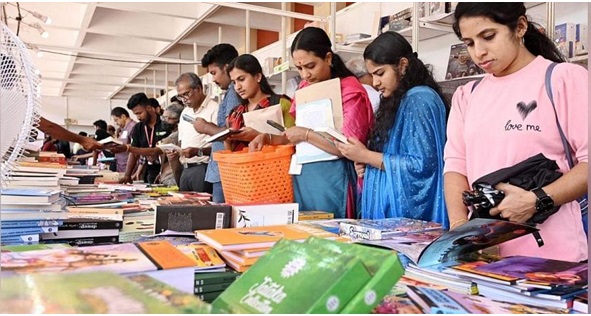
- 01 Nov 2023
Why in the News?
Kozhikode, in Kerala, was named the ‘City of Literature’ by the Unesco Creative Cities Network (UCCN), making it the first such city in India.
About India’s First ‘City Of Literature’:
- Kozhikode (Kerala), has achieved global recognition by joining the UNESCO Creative Cities Network.
- It is now known as the 'City of Literature,' making it the first Indian city to receive this prestigious title.
- This recognition was awarded on World Cities Day, (31 October) along with Gwalior, Madhya Pradesh, which was designated a 'City of Music.'
- Prague was the first city to receive the 'City of Literature' title in 2014.
About UNESCO Creative Cities Network:
- The UNESCO Creative Cities Network is a global initiative established by the United Nations Educational, Scientific, and Cultural Organization (UNESCO) to recognize and promote cities that have made significant contributions to the development of creative industries and culture.
- The UNESCO Creative Cities Network now comprises 350 creative cities from over 100 countries.
- These cities represent seven creative fields, including Crafts and Folk Art, Design, Film, Gastronomy, Literature, Media Arts, and Music.
- Participation in the UNESCO Creative Cities Network provides cities with opportunities for international collaboration, knowledge sharing, and the exchange of best practices in creative and cultural endeavours.
- These cities serve as hubs for artistic expression, cultural preservation, and economic growth, making them vital players in the global creative economy.
- Through this network, cities work together to harness the power of culture and creativity to address common challenges and promote sustainable development, ultimately enhancing their status on the global stage.
Digital Health Incentives Scheme (DHIS) (NewsOnAir)
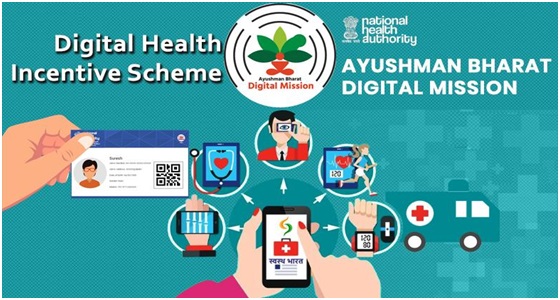
- 05 Aug 2023
Why in the News?
The National Health Authority (NHA) has recently declared the extension of its Digital Health Incentives Scheme (DHIS) until the 31st of December 2023.
About Digital Health Incentives Scheme (DHIS):
- Launched in December 2022, the DHIS became effective from 1st January 2023.
- The scheme is implemented by the National Health Authority (NHA) under the Ministry of Health and Family Welfare.
- Its primary objectives include giving a further impetus to digital health transactions across the country through the Ayushman Bharat Digital Mission (ABDM).
Salient Features of DHIS:
- The scheme offers incentives of up to four crore rupees, determined by the number of digital health records created and linked to patients' Ayushman Bharat Health Account numbers.
- Incentives are extended to hospitals, diagnostic labs, and providers of digital health solutions, including Hospital/Health Management Information Systems (HMIS) and Laboratory Management Information Systems (LMIS).
- Health facilities (hospitals and diagnostic labs) registered with the Ayushman Bharat Digital Mission's Health Facility Registry (HFR) and meeting the specified eligibility criteria can avail of the incentives.
Benefits of DHIS:
- Incentives for Digitization: Healthcare facilities and Digital Solution Companies participating in the scheme can earn incentives to cover expenses related to digitization.
- Enhanced Efficiency in Healthcare Delivery: DHIS streamlines the healthcare process, eliminating hassles in registration, appointment scheduling, consultations, IPD admission, discharge, and more.
- Robust Digital Health Ecosystem: The scheme contributes to the development of a strong digital health ecosystem, encompassing various levels of healthcare facilities.
- Improved Quality of Care: DHIS facilitates evidence-based, accessible, and high-quality healthcare services, leading to better patient outcomes and satisfaction.
Spike Non-Line of Sight (NLOS) Anti-tank Guided Missiles (TOI)
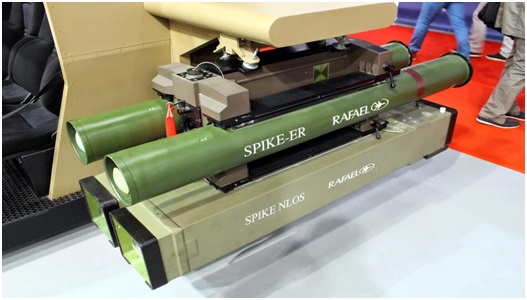
- 05 Aug 2023
Why in the News?
Israel's Spike Non-Line of Sight (NLOS) anti-tank guided missiles were recently delivered to the Indian Air Force.
About the Spike Non-Line of Sight (NLOS) Anti-tank Guided Missile:
- The Spike Non-Line of Sight (NLOS) Anti-tank Guided Missile (ATGM) is a sophisticated fire-and-forget missile designed for anti-tank and anti-personnel purposes.
- It features a tandem-charge high-explosive warhead.
- Developed by Rafael Advanced Defense Systems, an Israeli defense technology company, the Spike NLOS ATGM comes in man-portable, vehicle-launched, and helicopter-launched variants.
- The missile is currently in use by the defense forces of Israel and 38 other countries, including India, Netherlands, Germany, Italy, Peru, Spain, Belgium, Brazil, Canada, the UK, Philippines, and Singapore.
- Key features of the Spike NLOS ATGM:
- Striking range of up to 30 kilometers
- Weight of 71 kg, and
- An electro-optical seeker that offers superior target visibility compared to radar or infrared-guided missiles.
- The missile's seeker is equipped with a datalink, enabling the launch operator to maintain control over the missile during flight.
- This capability allows for precise targeting, including attacking different parts of a tank or engaging an alternative target, or aborting the strike if necessary.
- The Spike NLOS ATGM can be armed with various types of warheads, making it versatile for destroying tanks, and air defense systems, or for use in urban combat scenarios.
Perucetus colossus (Indian Express)
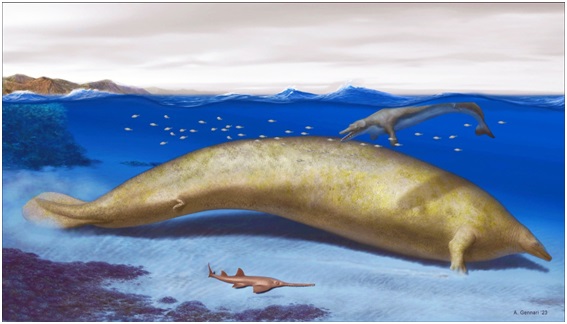
- 05 Aug 2023
Why in the News?
Perucetus colossus, whose fossils were discovered in Peru, maybe the heaviest discovered animal ever, even heavier than the blue whale.
About Perucetus colossus:
- The whale species Perucetus colossus is known from a recently described fossil dating back over 38 million years.
- Despite potentially being shorter in length, scientists believe that this ancient whale species might have been heavier than the modern blue whale.
- Researchers estimate that the weight of the Perucetus colossus could have ranged from 85 to an astonishing 340 tonnes.
- The fossilized bones of this species exhibited an unusual combination of large volume and extreme density, a characteristic known as pachyosteosclerosis.
- Pachyosteosclerosis is not observed in living whales, dolphins, and porpoises, but it is present in sirenians, a marine mammal group that includes sea cows.
- Unlike deep-diving whales, Perucetus colossus likely lived in shallow coastal areas, suggesting that it might have dived with air in its lungs.
- However, diving with air in the lungs would make it challenging to stay near the seafloor.
- The heavy bones of the Perucetus colossus might have played a crucial role in enabling it to do so.
- The skeletal mass of the Perucetus colossus is estimated to have been between five and eight tons, double that of a modern blue whale.
Study in India (SII) portal (Indian Express)
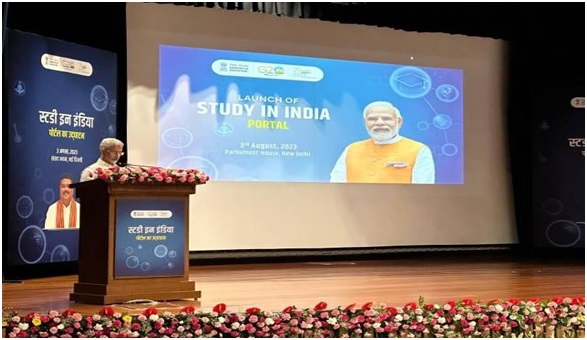
- 05 Aug 2023
Why in the News?
The Study In India (SII) portal was recently introduced by the Education Ministry, aiming to promote Indian education among international students.
About the Study in India (SII) portal:
- The Study in India (SII) portal serves as a dedicated website offering comprehensive information about higher education institutions (HEIs) in India.
- The main objective of the portal is to establish India as a global education hub and attract students from diverse backgrounds.
- The portal showcases a wide range of academic programs available in the HEIs, including undergraduate, postgraduate, and doctoral courses, along with courses related to the Indian Knowledge System (IKS), such as Yoga, Ayurveda, and classical arts.
- Detailed information about the academic facilities, research support, and other related offerings in the institutes is provided on the portal.
- It acts as a convenient one-stop platform for students, enabling them to register, apply for a visa, select desired courses, and receive offer letters from their chosen institutes.
- The portal allows students to apply to multiple institutes or courses of their preference, simplifying the application process.
- Study in India (SII) offers a streamlined and well-organized application process, providing international students with easy access to higher education opportunities in India.
What is Study in India (SII) Programme?
- The Study in India (SII) program is a prominent initiative initiated by the education ministry in 2018 with the aim of positioning India as a premier education destination for international students.
- The program seeks to attract foreign students to pursue higher education in India, providing them with valuable educational opportunities offered by renowned Indian universities.
Great Nicobar Island Project (DownToEarth)
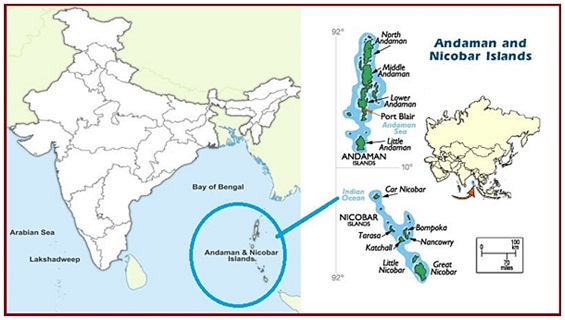
- 05 Aug 2023
Why in the News?
According to the Union Ministry of Environment, Forest and Climate Change's statement in the Rajya Sabha, approximately 964,000 trees are expected to be cut down for the implementation of the Great Nicobar Island Project.
About Great Nicobar Island Project:
- Ministry:
- The Ministry of Environment, Forest and Climate Change (MoEFCC).
- Implementing Agency:
- The Andaman and Nicobar Islands Integrated Development Corporation (ANIIDCO).
- The project is a massive undertaking with a budget of ?72,000 crore and is spearheaded by NITI Aayog, known as NITI Aayog's Project for Great Nicobar Island.
- Objective:
- The primary goal of the project is to achieve holistic development for the Great Nicobar Island (GNI).
- The project's vision is to transform the Great Nicobar Island, situated in the Bay of Bengal, into a modern, sustainable, and self-sufficient territory, thus facilitating the comprehensive development of Great Nicobar.
The plan comprises four key components:
- A transshipment port at Galathea Bay with an investment of ?35,000 crore.
- Development of a dual-use military-civil international airport.
- Establishment of a power plant.
- Creation of a township to support the overall project.
Indian National Space Promotion and Authorisation Centre (IN-SPACe) (TOI)
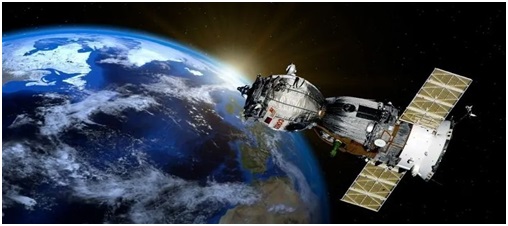
- 04 Aug 2023
Why in the News?
The Indian National Space Promotion and Authorisation Centre (IN-SPACe) has reported that three private sector satellite manufacturers plan to launch their earth observation satellites during this fiscal year.
About Indian National Space Promotion and Authorisation Centre (IN-SPACe):
- IN-SPACe serves as a single-window, independent, and autonomous agency within the Department of Space (DOS).
- It was established as part of the Space sector reforms to encourage and facilitate the active involvement of private players in the space industry.
- IN-SPACe's responsibilities include promoting, enabling, authorizing, and supervising various space activities of non-governmental entities, such as manufacturing launch vehicles and satellites, providing space-based services, and utilizing space infrastructure and facilities.
- Acting as an intermediary between ISRO and Non-Governmental Entities (NGEs), the agency assesses opportunities for leveraging India's space resources effectively and enhancing space-based initiatives.
- Also, IN-SPACe addresses the specific needs and demands of private players, including educational and research institutions, while working in collaboration with ISRO.
- The headquarters of IN-SPACe is located in Bopal, (Ahmedabad).
Samudrayaan (IndiaToday)
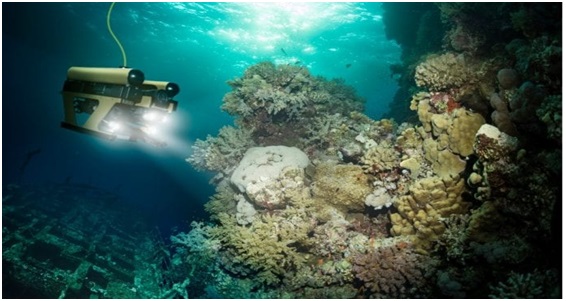
- 04 Aug 2023
Why in the News?
India's ambitious Samudrayaan project, aimed at exploring the deep ocean and its resources, is set to send three personnel to a depth of 6000 meters in a submersible vehicle.
About Samudrayaan Project:
- India's inaugural manned mission to delve into the depths of the ocean for exploration.
- Its primary objectives include studying deep ocean resources and conducting biodiversity assessments.
- The mission is designed to ensure minimal disturbance to the ecosystem, focusing solely on exploration.
- Part of the comprehensive Deep Ocean Mission aligned with the Central Government's Blue Economy policy.
- The Ministry of Earth Sciences (MoES) leads the implementation of this ambitious, multi-institutional endeavor.
What is the Blue Economy?
- Blue economy refers to the sustainable use of marine resources for exploration, economic growth, improved livelihoods, and transport while preserving the health of marine and coastal ecosystems.
- In India, the blue economy encompasses a wide range of sectors, including shipping, tourism, fisheries, and offshore oil and gas exploration.
Pradhan Mantri JI-VAN (Jaiv Indhan- Vatavaran Anukool fasal awashesh Nivaran) Yojana (PIB)
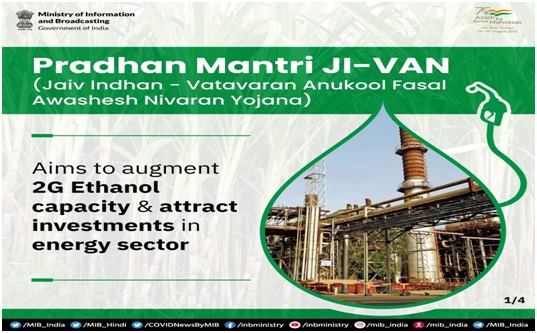
- 04 Aug 2023
Why in the News?
In the Lok Sabha, the Ministry of Petroleum & Natural Gas provided details about the Pradhan Mantri JI-VAN scheme.
About Pradhan Mantri JI-VAN (Jaiv Indhan- Vatavaran Anukool fasal awashesh Nivaran) Yojana:
- The scheme was officially notified in March 2019.
- Its main objective is to extend financial support to integrated bio-ethanol projects, facilitating the establishment of Second Generation (2G) ethanol projects using lignocellulosic biomass and other renewable feedstocks.
- It has a financial outlay of Rs. 1969.50 crore, spanning the period from 2018-19 to 2023-24.
- Financial assistance of Rs. 150 crore is offered per project for commercial projects, while demonstration projects receive Rs. 15 crore per project.
- The Ministry of Petroleum and Natural Gas serves as the nodal ministry for this scheme.
What is Lignocellulosic Biomass?
- Abundant Source: It is found in agricultural and forestry residues, as well as dedicated energy crops.
- Biofuels and Bio-based Products: Lignocellulosic biomass holds promise as a sustainable feedstock for producing biofuels like second-generation ethanol and various bio-based products.
- Challenges: Efficiently breaking down its complex structure to release sugars for fermentation or chemical conversion is a key challenge.
- Innovative Technologies: Researchers are exploring enzymatic hydrolysis and thermochemical treatments to unlock its energy potential.
- Green and Sustainable Future: Utilizing lignocellulosic biomass can reduce reliance on non-renewable resources and mitigate environmental impacts linked to conventional energy production.
Himalayan vulture bred (The Hindu)
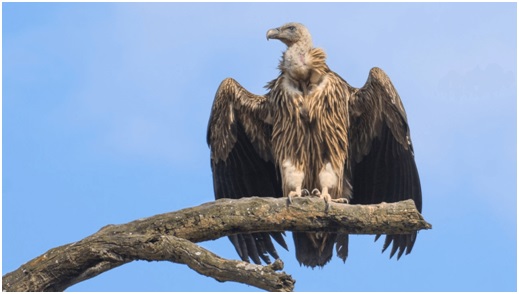
- 04 Aug 2023
Why in the News?
The first-ever instance of captive breeding of the Himalayan vulture in India has been successfully recorded at the Assam State Zoo in Guwahati by researchers.
About Himalayan Vulture:
- Scientific Name: Gyps himalayensis
- It is a rare and the largest bird species native to the Himalayas.
- Habitat:
- The Himalayan vulture primarily inhabits higher regions of the Himalayas and the Tibetan Plateau, typically found at elevations above 1500 meters.
- This species has a distribution range that extends from western China, Kazakhstan, Uzbekistan, Kyrgyzstan, Tajikistan, Afghanistan, and Pakistan to the eastern part of the Himalayan mountain range, including India, Nepal, and Bhutan, and further to central China and Mongolia.
- Description:
- This vulture is impressively large, featuring a sandy brown plumage with a pale, featherless head. In flight, it displays black primaries and a distinctive small-headed, squared-winged appearance.
- Himalayan vultures are usually spotted alone or in small groups, but they gather in large flocks when feeding on a carcass.
- Conservation status:
- The Himalayan vulture is categorized as "Near Threatened" on the International Union for Conservation of Nature (IUCN) Red List of Threatened Species.
- To ensure its preservation, the species is covered under the Multi-species Action Plan (MsAP) for the conservation of African-Eurasian vultures and is also included in national Action Plans in India, Bangladesh, Nepal, and Cambodia.
- Threats:
- The most significant potential threat to this vulture species is believed to be mortality resulting from the ingestion of diclofenac and other vulture-toxic non-steroidal anti-inflammatory drugs (NSAIDs), commonly used in livestock, particularly in South Asia.
India to launch female robot astronaut 'Vyommitra' ahead of manned mission (IndiaTV News)
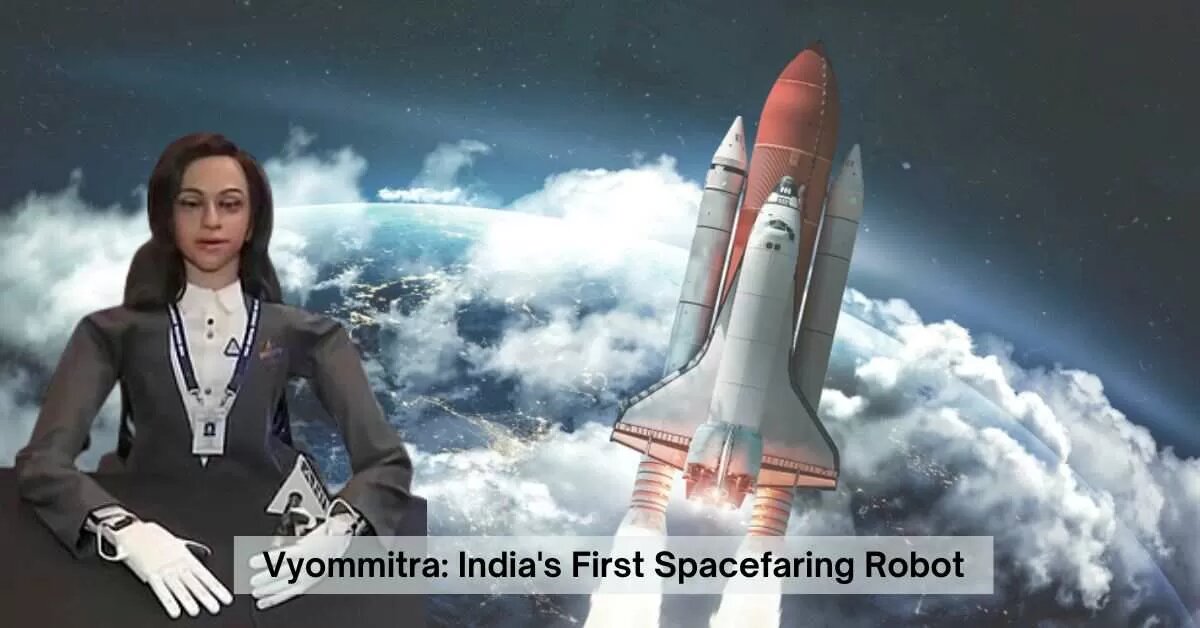
- 14 Dec 2023
Why is it in the News?
The Minister of Science & Technology, Dr Jitendra Singh, announced on Wednesday that India is set to launch Vyommitra, a female robot astronaut, into space as part of the ambitious Gaganyaan project.
What is Vyommitra?
- Vyommitra is an AI-enabled female robot.
- It was introduced at the inaugural session of the "Human Spaceflight and Exploration — Present Challenges and Future Trends" event in January 2020.
- The name is a combination of two Sanskrit words: Vyoma (Space) and Mitra (Friend), and it was created for the unmanned Gaganyaan mission.
- Because she lacks legs, she is described as a half-humanoid robot.
- She may, however, bend to the sides and forward.
- The ISRO Inertial Systems Unit (IISU) designed, developed, and integrated the robot.
- At the same time, Vikram Sarabhai Space Centre (VSSC), a sister Isro facility based in Thumba, built its fingers.
- This robot is designed to ride aboard a rocket and survive stress and vibrations while in flight.
- With the ability to speak, see, and make facial expressions, it has been created to resemble a human.
- Vyommitra will also acquire a digital twin.
- The twin would be built through collaboration with academic institutions such as the IITs.
- Vyommitra will accompany astronauts on manned missions in addition to the unmanned Gaganyaan mission.
- Vyommitra's mission is to perform specific tasks in order to analyse how astronauts might behave.
- She will mimic every action that astronauts are required to take and respond to them in two languages.
- She will monitor via module parameters, alert, carry out life support procedures, carry out tasks like operating switch panels, and imitate other human actions in space throughout the uncrewed flight.
What is the Gaganyaan mission?
- Named after the Sanskrit word for craft or vehicle to the sky, the Gaganyaan project has been developed at the cost of ?90 billion.
- If it succeeds, India will become only the fourth country to send a human into space after the Soviet Union, the US, and China.
- Under the Gaganyaan Mission, ISRO will be sending three humans to an orbit of 400 km for a 3-day mission and bring them back safely to Earth.
- Launch Vehicle: GSLV Mk III, also called the LVM-3 (Launch Vehicle Mark-3,) the three-stage heavy lift launch vehicle, will be used to launch Gaganyaan as it has the necessary payload capability.
- Training Collaboration with Russia: In June 2019, ISRO's Human Space Flight Centre partnered with Russia's Glavkosmos, a government-owned entity, under a contract encompassing comprehensive astronaut training.
- However, four astronauts selected for the Gaganyaan have been undergoing mission-specific training at the Astronaut Training Facility in Bengaluru.
CHD1L gene (DownToEarth)
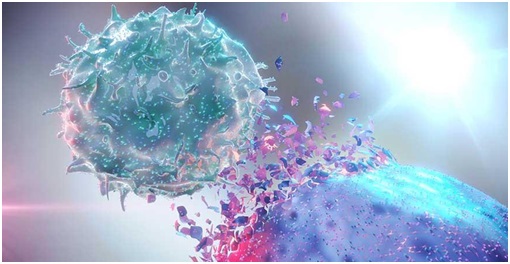
- 04 Aug 2023
Why in the News?
A new study indicates that some individuals of African descent have a CHD1L gene variant that may be involved in controlling the human immunodeficiency virus (HIV).
What is the CHD1L gene?
- The CHD1L gene encodes proteins that aid in repairing DNA damage within the body.
- A specific variant of the CHD1L gene is found predominantly in the African population and has been associated with a decreased viral load (amount of HIV in the blood) of HIV-1, the most common and severe type of HIV compared to HIV-2.
- Through the analysis of DNA from nearly 4,000 people of African descent living with HIV-1, researchers identified the presence of a gene variant of CHD1L located on chromosome 1.
- Individuals carrying this particular gene variant exhibited a low viral load, reducing their risk of transmitting the virus and slowing the progression of their own HIV-related illness.
- The study suggests that between 4% and 13% of people with African origins could be carrying this specific CHD1L gene variant.
How Google DeepMind’s AI breakthrough could revolutionise chip, and battery development (India Today)
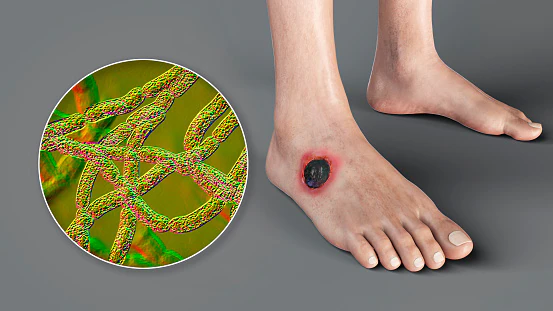
- 14 Dec 2023
Why is it in the News?
The World Health Organisation (WHO) has reported a significant anthrax outbreak in Zambia, marking an alarming spread of the disease across nine out of the country's ten provinces.
What is anthrax?
- According to Centres for Disease Control and Prevention (CDC), anthrax is a highly infectious disease that is caused by the gram-positive, rod-shaped bacteria known as Bacillus anthracis.
- Although it affects animals like cows, sheep, and goats, humans can get sick if they come in contact with infected animals or contaminated animal products.
- Anthrax is not contagious, which means we can't catch it from another person like the cold or flu.
Symptoms of anthrax:
- The disease manifests in three forms depending on the route of infection: cutaneous, gastrointestinal, and inhalational.
- Cutaneous anthrax, the most common form, presents with itchy bumps that develop into black sores, often accompanied by fever and muscle aches.
- Gastrointestinal anthrax resembles food poisoning initially but can escalate to severe abdominal pain and bloody diarrhoea.
- Inhalational anthrax, the deadliest form, starts with cold-like symptoms before progressing to severe respiratory distress and shock.
How is anthrax diagnosed?
- Anthrax can be diagnosed by identifying Bacillus anthracis in blood, skin lesions, or respiratory secretions through laboratory culture, PCR, or ELISA tests.
- While there is no specific test to determine exposure to anthrax, public health investigations play a crucial role in identifying potential cases.
Treatment for anthrax:
- Treatment for anthrax is available and includes antibiotics such as ciprofloxacin, doxycycline, or levofloxacin.
- If diagnosed early, antibiotic treatment can cure most anthrax infections.
- In severe cases, hospitalisation and treatments like continuous fluid drainage and mechanical ventilation may be necessary.
- Vaccines are also available for both livestock and humans, although human vaccines are typically reserved for those at high occupational risk.
How Google DeepMind’s AI breakthrough could revolutionise chip, and battery development (The Hindu)

- 14 Dec 2023
Why is it in the News?
Road traffic deaths fell by 5% to 1.19 million fatalities annually worldwide between 2010 and 2021, with 108 UN member nations reporting a drop, a report by the World Health Organization (WHO) said. India, however, registered a 15% increase in fatalities.
News Summary:
- The fifth edition of the WHO Global Status Report on Road Safety, released in 2023, serves as a comprehensive assessment of progress in mitigating road traffic deaths.
- This report evaluates advancements made between 2010 and 2021, establishing a foundation for meeting the ambitious target of the United Nations Decade of Action 2021–2030—to cut road traffic fatalities in half by 2030.
- Declared by the United Nations General Assembly in September 2020, the Decade of Action for Road Safety 2021-2030 strives to achieve a 50% reduction in road traffic deaths and injuries by 2030.
- Generous support from Bloomberg Philanthropies has played a crucial role in producing this report.
- Since 2007, Bloomberg Philanthropies has committed $500 million to facilitate road safety initiatives in low- and middle-income countries and cities worldwide
Key Insights from the Global Status Report on Road Safety 2023:
- Countries Achieving Over 50% Reduction in Road Traffic Deaths: Ten countries, including Belarus, Brunei Darussalam, Denmark, Japan, Lithuania, Norway, Russian Federation, Trinidad and Tobago, the United Arab Emirates, and Venezuela, have successfully reduced road traffic deaths by more than 50%.
- Additionally, 35 more countries have made commendable progress, achieving a reduction in road traffic deaths ranging from 30% to 50%.
- Leading Cause of Death for Children and Youth: As of 2019, road traffic crashes have become the primary cause of death for children and youth aged five to 29 years.
- Globally, these crashes rank as the 12th leading cause of death across all age groups.
- 5% Reduction in Road Traffic Fatalities in the Last Decade: Despite a population growth of nearly 14 billion over the last decade, there has been a 5% reduction in the absolute number of road traffic fatalities.
- The road fatality rate has declined from 18 per 1 lakh people in 2010 to 15 per 1 lakh in 2021, marking a 16% decrease in the road traffic death rate since 2010.
- Regional Distribution of Traffic Deaths: The regional breakdown indicates that:
- 28% of global road traffic deaths occurred in the WHO’s South-East Asia Region
- 25% in the Western Pacific Region
- 19% in the African Region
- 12% in the Region of the Americas
- 11% in the Eastern Mediterranean Region, and
- 5% in the European Region.
- The situation in Low- and Middle-Income Countries: Nine out of 10 road traffic deaths transpire in low- and middle-income countries, with fatalities in these nations being disproportionately higher (three times) in comparison to the number of vehicles and roads they possess.
- Countries Meeting WHO Best Practices for Risk Factors: Only six countries have legislation aligning with WHO best practices for all risk factors (speeding, drunk driving, and the use of motorcycle helmets, seatbelts, and child restraints).
- Meanwhile, 140 countries, constituting two-thirds of UN Member States, have such laws governing at least one of these risk factors.
- India-Specific Observation: In India, the reported deaths due to road crashes increased from 1,50,785 in 2018 to 1,53,792 in 2021.
- Notably, the number stood at 1.3 lakh in 2010.
Lunar Codex (The Guardian)

- 03 Aug 2023
Why in the News?
The Lunar Codex program has the potential to bestow immortality upon an assorted collection of human-created art.
About Lunar Codex:
- The Lunar Codex is a remarkable collection of art curated by artists worldwide, intended to endure on the lunar surface as a timeless testament to human creativity, even amid tumultuous times like wars, pandemics, and economic crises.
- At the helm of this endeavor is Samuel Peralta, a semi-retired physicist and art enthusiast from Canada.
- Comprising diverse forms of digitized art, the Lunar Codex will be dispatched to the moon to serve as a permanent record of human ingenuity. Memory cards and NanoFiche, an updated 21st-century version of film-based microfiche, guarantee the safe arrival of these artistic expressions to the lunar surface.
- Carefully assembled from contributions by 30,000 artists, writers, filmmakers, and musicians representing 157 countries, the collection spans an array of art forms, including images, magazines, books, podcasts, movies, and music.
- The art is divided into four capsules:
- The first capsule, the Orion collection, has already encircled the moon after being launched aboard NASA's Artemis 1 mission via the Orion spacecraft last year.
- In the months ahead, multiple lunar landers will transport the Lunar Codex capsules to distinct locations, including craters at the moon's South Pole and the lunar plain known as Sinus Viscositatis, ensuring the enduring legacy of human creativity on Earth's celestial neighbor.
Here to enhance partnership between EFTA, India: Norway's trade minister (Business Standard)
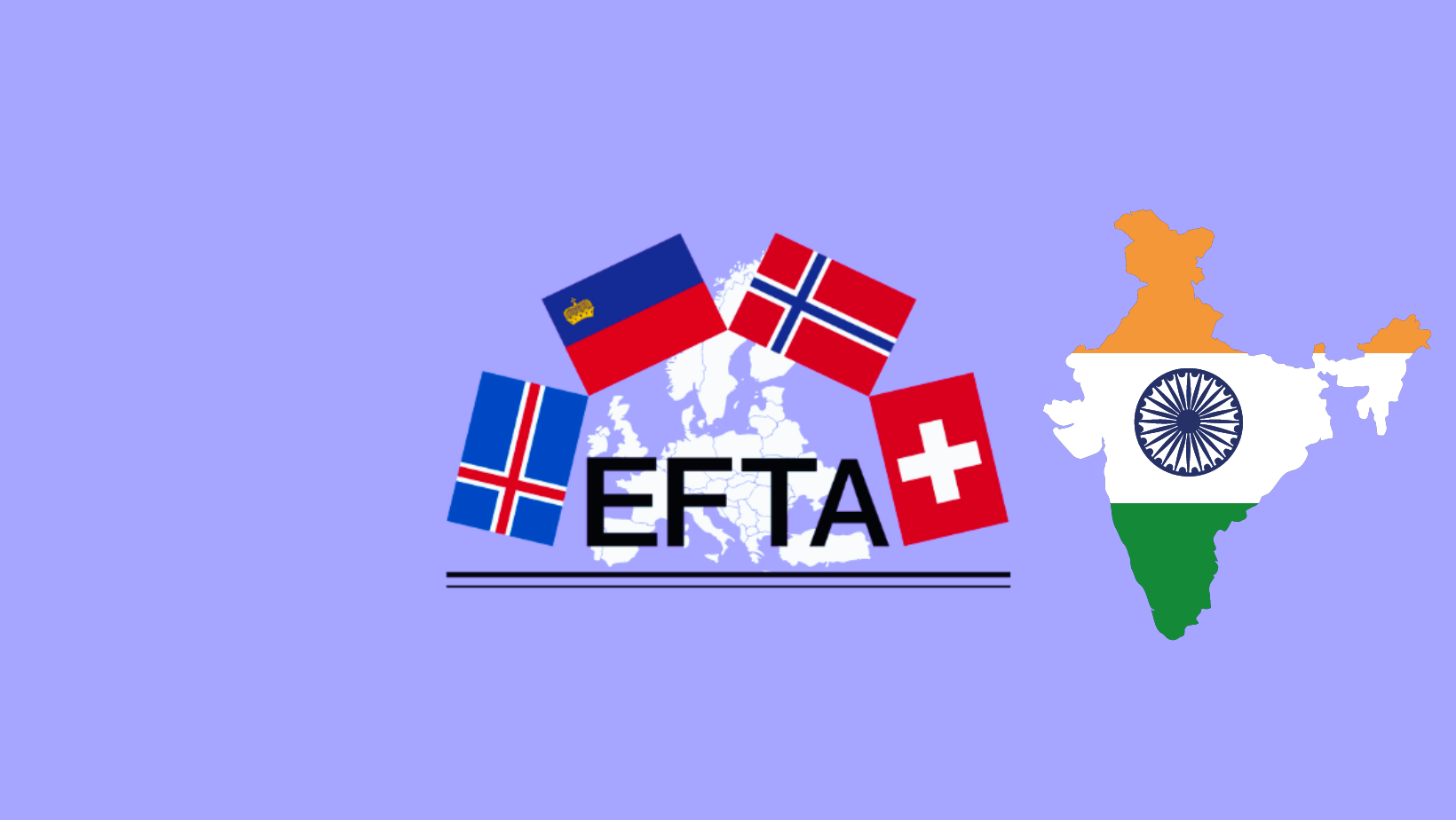
- 14 Dec 2023
Why is it in the News?
Norway's Minister of Trade and Industry Jan Christian Vestre has said his India visit aims to enhance collaboration between European free trade partners and India and improve framework conditions for job creation, value creation, and investments.
About the European Free Trade Association (EFTA):
- The European Free Trade Association (EFTA) is an intergovernmental organization established in 1960 by the Stockholm Convention.
- Its core objective is to foster free trade and economic integration among its member countries, both within Europe and on a global scale.
- Member Countries: EFTA comprises four member countries: Iceland, Liechtenstein, Norway, and Switzerland.
- These nations are characterized by open, competitive economies, demonstrating a shared commitment to progressively liberalize trade both within multinational forums and through individual free trade agreements.
- Customs Distinction: Unlike the European Union (EU), EFTA operates differently as it is not a customs union.
- This key distinction allows each EFTA State the autonomy to establish its own customs tariffs and formulate foreign trade measures independently concerning non-EFTA States.
- Association Responsibilities:
- EFTA manages various aspects crucial to its objectives, including:
- Facilitating free trade among EFTA countries.
- Overseeing EFTA's engagement in the European Economic Area (EEA), encompassing the European Union and three EFTA countries (Iceland, Liechtenstein, and Norway, excluding Switzerland).
- Managing EFTA's extensive network of free trade agreements globally.
- Free Trade Agreement Network: EFTA member countries boast one of the largest networks of Free Trade Agreements (FTAs) globally.
- This comprehensive network spans over 60 countries and territories, incorporating the European Union among others.
EFTA plays a pivotal role in promoting economic collaboration, free trade, and global engagement, distinguishing itself from the EU through its approach to customs and foreign trade measures.
What is a Free Trade Agreement?
- A Free Trade Agreement (FTA) is an agreement between two or more nations aimed at lowering barriers to imports and exports among them.
- In a free trade scenario, goods and services can move across international borders with minimal government tariffs, quotas, subsidies, or restrictions hindering their exchange.
- The principle of free trade stands in contrast to trade protectionism or economic isolationism.
- FTAs come in various forms, including Preferential Trade Agreements, Comprehensive Economic Cooperation Agreements, and Comprehensive Economic Partnership Agreements (CEPA).
COP28: What was the most important deal short (Indian Express)
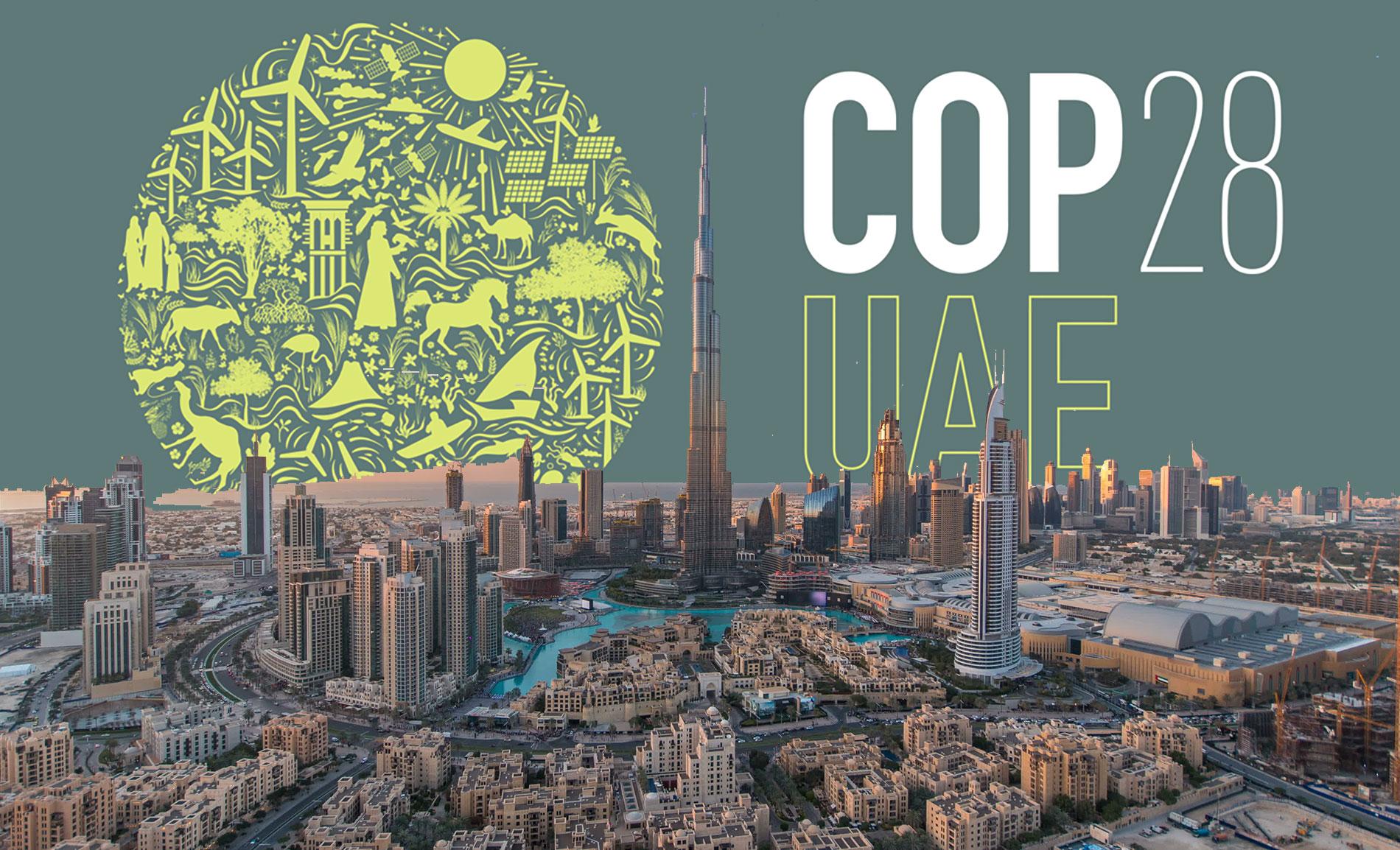
- 14 Dec 2023
Why is it in the News?
COP28: The annual climate conference this year saw some key resolutions on fossil fuels, methane emissions, and funds to fight global warming, among others. However, many concerns remain.
Context:
- The 2023 United Nations Climate Change Conference, also referred to as COP28 took place from November 30 to December 12 at Expo City in Dubai, United Arab Emirates.
- While the event yielded significant outcomes, it, akin to its predecessors, fell short of meeting the anticipated expectations.
Key Outcomes of COP28:
- Fossil Fuel Transition Ambiguity: Acknowledging the role of fossil fuels in global warming for the first time, the agreement calls for countries to contribute to transitioning away from fossil fuels to achieve net-zero emissions by 2050.
- However, the lack of specific time schedules and targets disappointed some nations that expected a more explicit commitment to a "fossil fuel phase-out."
- Renewable Energy Tripling: The agreement calls on countries to contribute to tripling the global installed capacity of renewable energy and doubling annual improvements in energy efficiency.
- This measure is expected to result in emissions avoidance of approximately 7 billion tonnes of carbon dioxide equivalent by 2030.
- However, the global nature of this target raises questions about individual country responsibilities.
- Coal Phase-Down Continuation: The agreement reiterates the commitment to the phase-down of coal, following up on the decision made at COP26.
- While there were considerations to impose restrictions on new coal-fired power plants without carbon capture and storage, these were dropped due to resistance from countries like India, China, and South Africa.
- The agreement lacks specifics on measurement criteria or baseline for this phase-down.
- Methane Emission Challenges: Despite the significance of methane as a greenhouse gas, responsible for nearly 25% of emissions and is 80 times more potent than CO2, the agreement avoids setting targets for methane emission cuts in 2030.
- Countries like India are opposed to mandates due to the agricultural sector's major role in methane emissions.
- Operational Loss & Damage Fund: A significant outcome for vulnerable nations, COP28 operationalized the Loss and Damage Fund, established in COP27.
- Commitments, totaling around US$ 800 million, were made during the conference to assist countries recovering from climate-induced disasters.
- Global Goal on Adaptation Establishment: COP28 adopted a global framework for adaptation, addressing a historic imbalance where adaptation efforts received less attention and resources compared to mitigation activities.
- The framework, though established, lacks financial provisions, necessitating further strengthening in subsequent years.
- Adaptation Challenges: While the global adaptation framework is a positive step, there is still work to be done, particularly in defining indicators for measuring progress on each global goal.
- Adaptation efforts historically focused on local initiatives, and the agreement aims to garner more attention and resources for these endeavours on a global scale.
- Climate Action Acceleration Shortcomings: The final agreement falls short of providing sufficient impetus for the acceleration of climate action in the immediate term.
What is the Conference of the Parties (COP)?
- In 1992, Rio Earth Summit, 154 countries joined an international treaty, the United Nations Framework Convention on Climate Change, as a framework for international cooperation to combat climate change by limiting average global temperature increases and the resulting climate change, and coping with impacts that were, by then, inevitable.
- The COP is the supreme decision-making body of the Convention.
- All States that are Parties to the Convention are represented at the COP, at which they review the implementation of the Convention and any other legal instruments that the COP adopts and take decisions necessary to promote the effective implementation of the Convention, including institutional and administrative arrangements.
- Currently, there are 198 'parties' or signatories of the Convention.
JALDOST airboat (The Hindu)
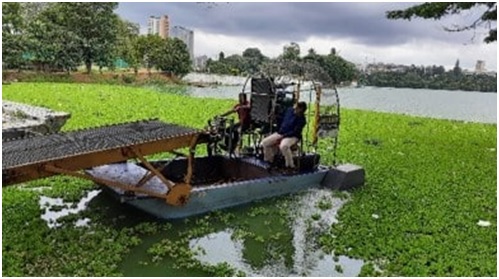
- 03 Aug 2023
Why in the News?
The National Aerospace Laboratories (NAL) recently revealed its latest creation, the JALDOST airboat.
What is JALDOST?
- JALDOST is an innovative airboat specifically designed for water operation, aimed at effectively removing excess aquatic weed and floating waste from various water bodies.
- The airboat features a closed, airtight pontoon-type hull, ensuring its inherent unsinkability.
- Notably, the JALDOST incorporates a hybrid propulsion system, combining air propulsion and paddle wheel propulsion, making it versatile and efficient in its movements.
- Operating through weed with ease, JALDOST serves as an ideal platform for collecting and transporting these undesirable aquatic plants to the shore.
- It achieves this through a steel mesh belt conveyor system situated at the front, which gathers the waste and deposits it on the horizontal deck conveyor.
- Upon reaching the shore, the collected waste is efficiently unloaded using a rear conveyor system, facilitating easy transfer to trucks or tractors.
- The National Aerospace Laboratories (NAL) has introduced two versions of the airboat, namely JALDOST Mark-1 and an upgraded version, JALDOST Mark-2, further enhancing its capabilities.
Green Rising initiative launched at RewirEd summit to empower Youth-Led climate solutions (DD News)
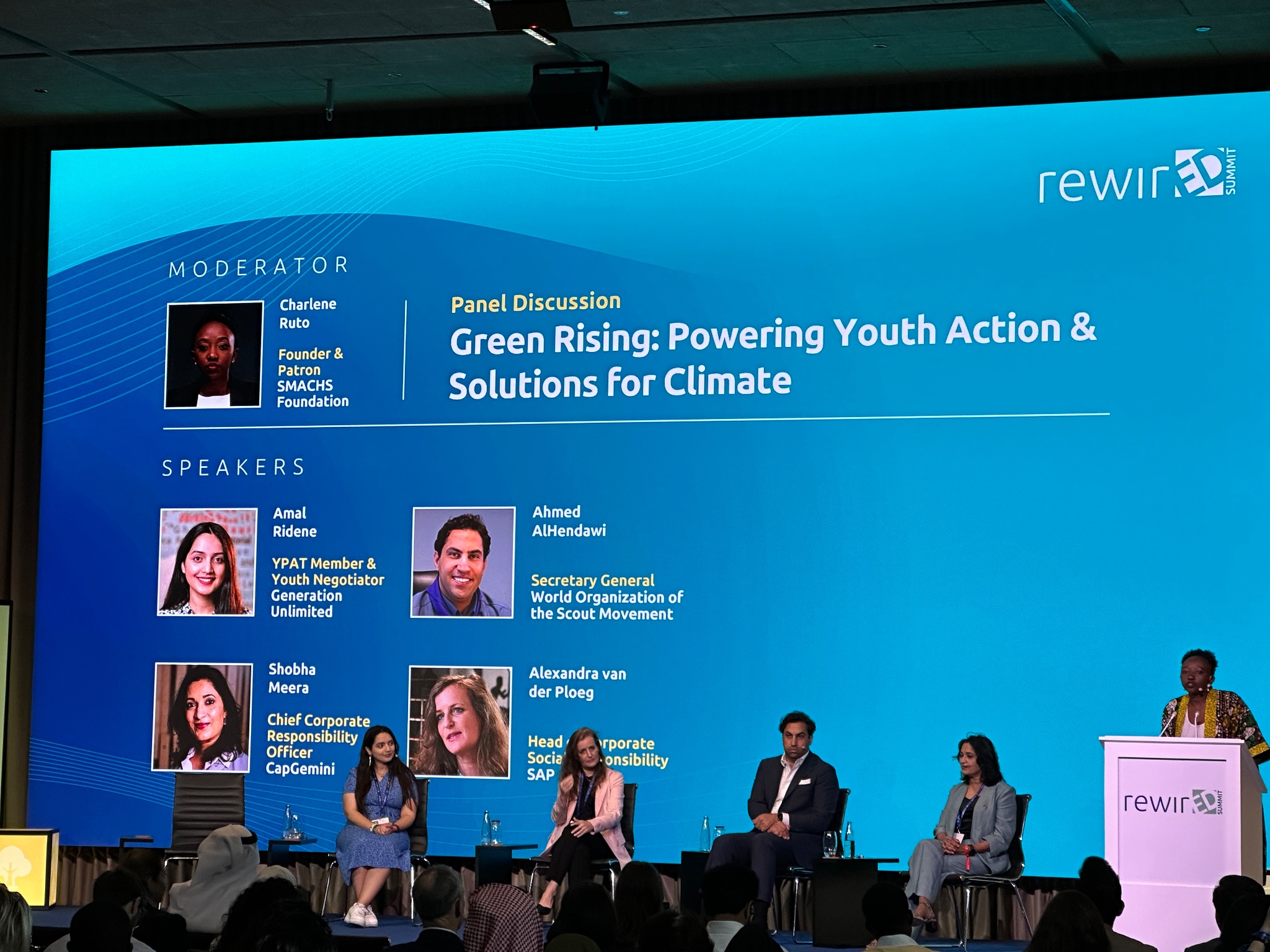
- 09 Dec 2023
What is the Green Rising Initiative?
- The "Green Rising" initiative focuses on engaging youth for impactful environmental actions at the grassroots level, aligning with the global effort to address the severe impacts of climate change.
- This initiative encompasses both the global "Green Rising" initiative and the "Green Rising India Alliance," a collaborative endeavor that brings together UNICEF, Generation Unlimited, and a diverse network of public, private, and youth partners.
- The primary objective is to mobilize millions of young individuals globally, encouraging their active engagement in green initiatives aimed at addressing and adapting to the profound impacts of climate change within their communities.
- In India, this effort is channelled through the YuWaah campaign, which specifically focuses on harnessing the energy and commitment of the youth to drive impactful environmental actions at the grassroots level.
About UNICEF:
UNICEF, or the United Nations International Children's Emergency Fund, is a specialized agency of the United Nations committed to promoting the well-being and rights of every child globally.
- Foundation and Establishment: Established in 1946 by the United Nations General Assembly, UNICEF was originally designed to provide emergency food and healthcare to children in countries devastated by World War II.
- Over time, UNICEF's scope evolved to include long-term developmental programs, focusing on education, healthcare, nutrition, clean water, sanitation, and protection for children in need.
- UNICEF is governed by an Executive Board consisting of 36 members who are elected to terms of three years by the United Nations Economic and Social Council.
- Universal Presence: UNICEF operates in over 190 countries and territories worldwide, making it one of the most extensive and widely recognized humanitarian organizations globally.
- Child Rights Advocacy: UNICEF is a leading advocate for children's rights, working to ensure that every child has the right to survive, thrive, and reach their full potential, regardless of their background or circumstances.
- Emergency Response: In times of crises, including natural disasters, conflicts, and pandemics, UNICEF plays a crucial role in providing immediate and life-saving assistance to affected children and communities.
- Partnerships and Collaborations: UNICEF collaborates with governments, non-governmental organizations (NGOs), other UN agencies, and the private sector to implement its programs and maximize its impact.
- Funding Mechanism: UNICEF is funded entirely by voluntary contributions from governments, private donors, businesses, and the general public. It relies on these funds to carry out its programs and respond to emergencies.
- Focus on Equality and Inclusion: UNICEF emphasizes the importance of equality and inclusion, working to address disparities and ensure that the most vulnerable children, including those with disabilities or from marginalized communities, are not left behind.
- Global Campaigns: UNICEF spearheads global campaigns to address critical issues affecting children, such as vaccination drives, education initiatives, and efforts to eliminate child labour and violence against children. These campaigns aim to rally public support and create awareness about the challenges faced by children worldwide.
- It was awarded the Nobel Prize for Peace in 1965 for the “promotion of brotherhood among the nations”.
- Headquarters: New York City
India is expected to withstand global shocks as its current account deficit improves due to falling crude oil prices. (ET)

- 09 Dec 2023
Why is it in the News?
After two years of battling inflation and growth pangs, the Reserve Bank of India (RBI) was in for a pleasant surprise when the economic growth trumped its expectations to hit 7.2 per cent in the last month.
Context:
- The Reserve Bank of India (RBI) has unveiled its most recent monetary policy report, projecting a robust economic recovery for the country in the current fiscal year.
- Anticipating a significant upswing, the central bank foresees the gross domestic product (GDP) to expand by 7 percent in 2021-22, a notable rebound from the 7.3 percent contraction witnessed in the preceding year.
- However, the RBI issues a cautionary note about the challenges posed by inflation, which has consistently exceeded the target range of 2-6 percent over several months.
- The report attributes inflationary pressures to supply-side disruptions, escalating commodity prices, increased fuel taxes, and demand-related factors.
- The RBI anticipates inflation to remain elevated in the short term before gradually moderating in the latter half of the year.
- The RBI's stance mirrors a delicate equilibrium, emphasizing the intricate balance between fostering economic growth and managing inflation, often characterized as the Goldilocks Effect.
- This effect alludes to a scenario where the economy is neither excessively overheated nor excessively sluggish but rather poised for optimal growth with minimal inflationary pressures.
What is the Goldilocks Effect?
- The Goldilocks Effect, also known as the Goldilocks Principle, posits that individuals have a predisposition to seek an amount that is 'just right' for their specific needs or preferences.
- This concept, derived from the children's story of Goldilocks and the Three Bears, reflects a preference for options that are neither too extreme nor too moderate, falling within an optimal and desirable range.
- This principle finds application across various fields and disciplines, encompassing psychology, hard sciences, economics, marketing, and engineering, each incorporating its unique interpretation of the principle.
- Goldilocks Pricing: One notable application of the Goldilocks Effect is in Goldilocks Pricing, a psychological pricing strategy grounded in concepts such as product differentiation, comparative pricing, and bracketing.
- Product differentiation involves distinguishing certain products from others, a crucial step for businesses looking to leverage the Goldilocks Effect.
- This differentiation is then coupled with comparative pricing, where businesses simultaneously offer multiple versions of a product with varying quality levels attached to corresponding price points.
- The strategy hinges on providing three options: one priced too high for most, one priced too low for most, and one priced just right.
- When executed effectively, this approach enables businesses to appeal to diverse segments of the market, capturing premium buyers, standard consumers, and discount seekers.
What is the Universal Declaration of Human Rights, which is marking its 75th anniversary? (Indian Express)
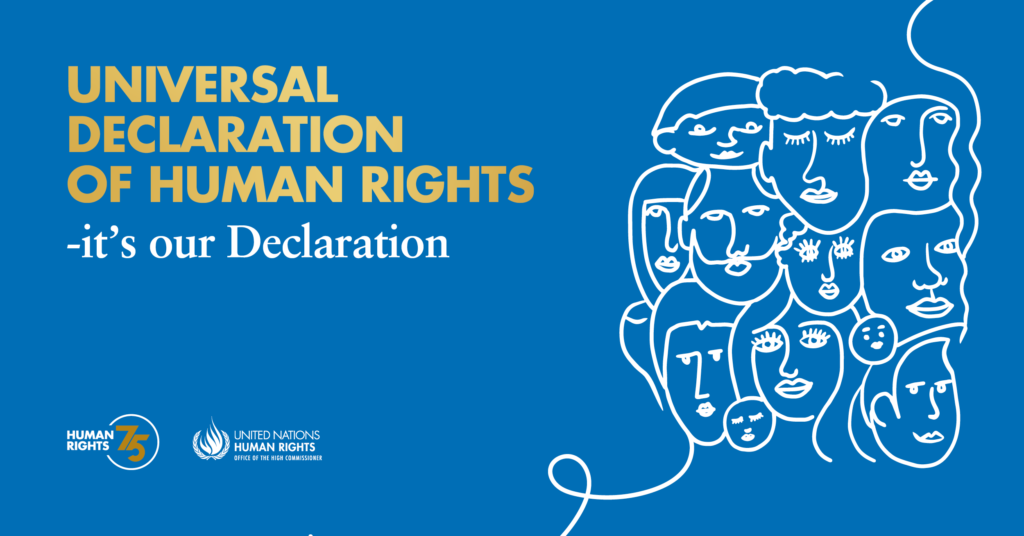
- 09 Dec 2023
Why is it in the News?
Seventy-five years ago on Sunday, the UN General Assembly approved the Universal Declaration of Human Rights at a meeting in Paris – laying one of the foundation stones of the international order that emerged following the horrors of World War II.
What is the Universal Declaration of Human Rights (UDHR)?
- On 10 December 1948, during a session in Paris, the United Nations General Assembly unanimously endorsed the Universal Declaration of Human Rights (UDHR), marking a pivotal moment in shaping the post-World War II international order.
- The UDHR emerged as a response to wartime atrocities and aimed to establish a shared understanding of the fundamental rights and freedoms inherent to all individuals.
- A concise yet impactful document, the declaration comprises a preamble and 30 articles that delineate essential rights and freedoms.
- These 30 articles encompass a comprehensive spectrum of civil, political, economic, social, and cultural rights.
- Emphasizing their universality, these rights are deemed applicable to all individuals, irrespective of nationality, ethnicity, gender, religion, or any other status.
- While not legally binding, the UDHR has functioned as a guiding force inspiring the development of international human rights law.
Key Features:
- Preamble: The preamble elucidates the reasons behind adopting the declaration, underscoring the inherent dignity and the equal and inalienable rights of all members of the human family.
- Articles: The UDHR articulates 30 articles outlining a wide array of civil, political, economic, social, and cultural rights. Examples of these rights include:
- The right to life, liberty, and security of person.
- The right to freedom of religion, expression, and assembly.
- The right to work and education.
- The right to an adequate standard of living.
- The declaration asserts that "all are equal before the law" and emphasizes the entitlement of everyone to "a fair and public hearing by an independent and impartial tribunal."
- It also affirms the right of "everyone to seek and to enjoy in other countries asylum from persecution.
Achievements of UNDHR:
- The United Nations Universal Declaration of Human Rights (UNDHR) is acknowledged for its significant impact, having served as the inspiration and foundation for over 70 human rights treaties at both global and regional levels, as noted by the United Nations.
- It played a pivotal role in inspiring movements such as decolonization, the anti-apartheid movement, and various struggles for freedom worldwide, including those related to gender, LGBTIQ+ rights, and opposition against racism.
What is the Current Situation?
- As the 75th anniversary is commemorated, human rights face challenges amid conflicts such as the Israel-Hamas war, Russia's actions in Ukraine, internal strife in Myanmar and Sudan, and numerous other global situations.
- UN Secretary-General Antonio Guterres has remarked that the Universal Declaration has been frequently misused and abused, exploited for political gain, and often ignored by those who should uphold it.
- Contrastingly, Amnesty International asserts that the declaration serves as living proof that a global vision for human rights is attainable and can be realized.
- Despite instances of neglect or exploitation, the declaration remains relevant, and the world is encouraged to recognize its successes while learning from its failures.
Amit Shah to chair 26th meeting of Eastern Zonal Council in Bihar on Sunday (Business Standard)
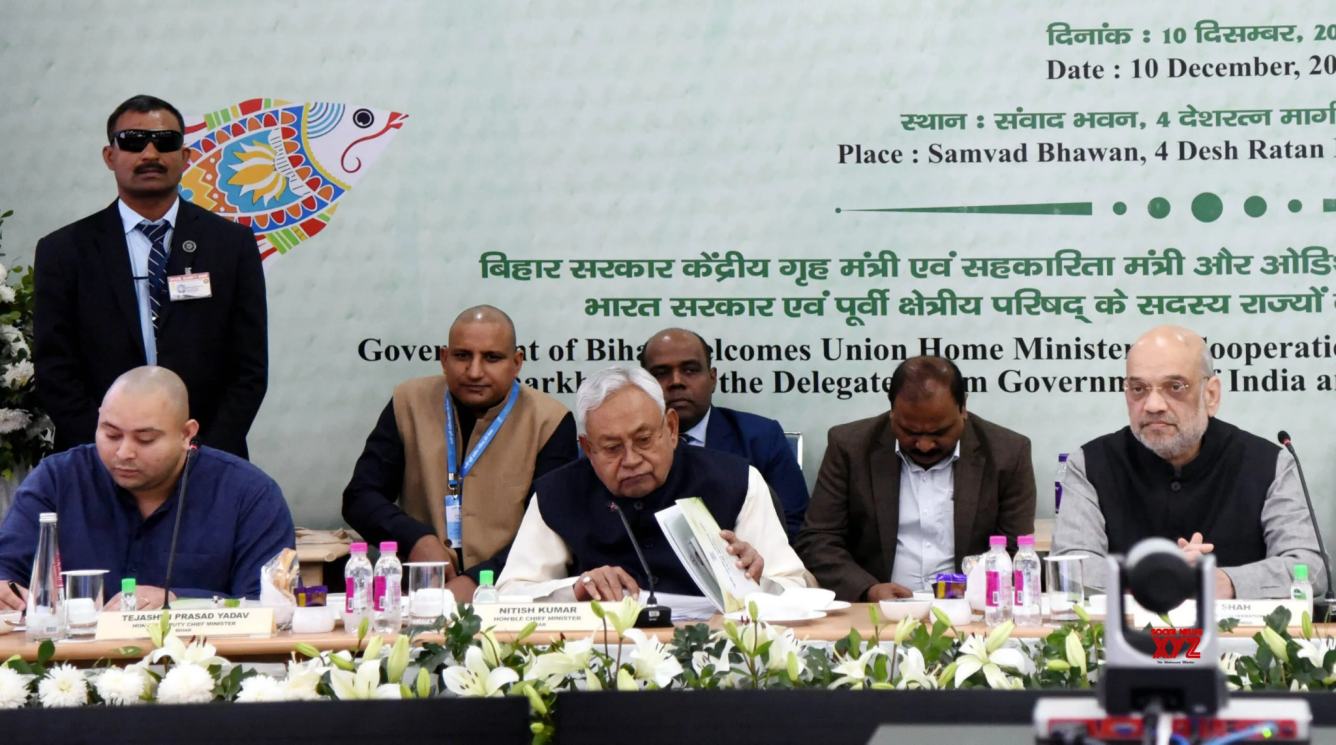
- 09 Dec 2023
Why is it in the News?
Union Home Minister Amit Shah will chair the 26th meeting of the Eastern Zonal Council in Bihar's capital on Sunday, the Ministry of Home Affairs (MHA) said on Saturday.
What are Zonal Councils?
- The conceptualization of Zonal Councils can be attributed to the visionary initiative of India's first Prime Minister, Pandit Jawahar Lal Nehru, in 1956.
- These councils are statutory bodies established by an Act of Parliament, namely the States Reorganisation Act of 1956.
- The act delineated the country into five zones (Northern, Central, Eastern, Western, and Southern), assigning a Zonal Council to each.
Present Composition of Zonal Councils:
- Northern Zonal Council: Includes Haryana, Himachal Pradesh, Jammu & Kashmir, Punjab, Rajasthan, National Capital Territory of Delhi, and Union Territory of Chandigarh.
- Central Zonal Council: Encompasses Chhattisgarh, Uttarakhand, Uttar Pradesh, and Madhya Pradesh.
- Eastern Zonal Council: Comprises Bihar, Jharkhand, Orissa, and West Bengal.
- Western Zonal Council: Involves Goa, Gujarat, Maharashtra, and the Union Territories of Daman & Diu and Dadra & Nagar Haveli.
- Southern Zonal Council: Consists of Andhra Pradesh, Karnataka, Kerala, Tamil Nadu, and the Union Territory of Puducherry.
- Exclusion and Special Council: The North Eastern States (Assam, Arunachal Pradesh, Manipur, Tripura, Mizoram, Meghalaya, and Nagaland) are not part of Zonal Councils.
- Instead, their unique challenges are addressed by the North Eastern Council, established under the North Eastern Council Act of 1972.
- Sikkim was included in the North Eastern Council in 2002.
Organizational Structure:
- Chairman: The Union Home Minister serves as the Chairman for each Zonal Council.
- Vice Chairman: Chief Ministers of the states in each zone act as Vice-Chairman, rotating annually.
- Members: Chief Minister and two nominated Ministers from each state, along with two members from Union Territories in the zone.
- Advisers: Planning Commission nominees, Chief Secretaries, and another officer/Development Commissioner from each state in the zone.
Objectives:
- The primary objectives of Zonal Councils include promoting national integration and curbing acute State consciousness, regionalism, linguism, and particularistic tendencies.
- Additionally, they aim to facilitate cooperation, idea exchange, and a climate of collaboration among states for the successful execution of development projects.
Functions:
- Zonal Councils function as advisory bodies, empowered to discuss common interests between the Union and represented states.
- They can recommend courses of action to the Central Government and individual state governments.
- Specific areas of discussion may include economic and social planning, border disputes, linguistic minorities, inter-state transport, and matters arising from the reorganization of states under the States Reorganisation Act.
Navy plans to get undersea chariots, made in India, for special operations (Indian Express)

- 09 Dec 2023
Why is it in the News?
The Indian Navy is planning to acquire indigenously made swimmer delivery vehicles — also known as underwater chariots and midget submarines — as part of efforts to modernise and strengthen the capabilities of its Marine Commandos (MARCOS) for special undersea operations.
News Summary:
- In a strategic move, the Indian Navy set to deploy domestically manufactured undersea chariots for specialized operations.
- These innovative vessels, designed to accommodate a crew of at least six, will be equipped with cutting-edge lithium-ion batteries for enhanced performance.
- The significant size of these undersea chariots opens up new possibilities, allowing divers to transport larger cylinders.
- This advancement translates to extended underwater missions, thereby amplifying operational capabilities in shallow waters.
- Moreover, the spacious design of these chariots facilitates the carriage of extra weaponry, providing the Navy with increased flexibility for diverse and complex operations.
- This development signifies a noteworthy stride in bolstering the Navy's underwater capabilities through indigenous technological advancements.
What are Chariots?
- Nearly all modern navies in the world use chariots, which are extremely specialized platforms.
- These self-propelled vehicles can be deployed from ships or submarines, tailored to their size and designated roles.
- Notably, during World War II, manned human torpedoes were commonly referred to as chariots.
- Functionality: Chariots prove invaluable for naval operations in shallow waters, offering a spectrum of missions.
- These include shallow-water surveillance, targeted assaults on adversary coastal installations, and even engagements with ships in harbours.
- Particularly advantageous is their ability to grant marine commandos access to areas close to adversary harbours—locations that submarines, constrained by shallow waters, may find challenging to reach.
- Furthermore, these chariots facilitate the efficient transportation of weapons and equipment to operational zones.
- Utilization in India: While detailed information on the swimmer delivery vehicles employed by the Indian Navy is not widely available, some sources suggest the utilization of Italian-made chariots for several years.
- Around 2012, recognizing the strategic importance of these platforms, the Ministry of Defence entrusted Hindustan Shipyard Limited with the construction of two such submarines, underscoring India's commitment to enhancing its maritime capabilities.
What are Marine Commandos (MARCOS)?
- The Marine Commandos, known by the acronym MARCOS and formally recognized as the Marine Commando Force (MCF), stand as the specialized forces within the Indian Navy entrusted with the execution of special operations.
- Established in February 1987, MARCOS possesses versatile capabilities to operate effectively across diverse environments, encompassing sea, air, and land.
- Over time, the force has accumulated valuable experience, earning an esteemed international reputation for its high level of professionalism.
- MARCOS routinely engage in specialized maritime operations in regions such as Jammu and Kashmir, navigating the Jhelum River and Wular Lake with precision and expertise.
Iberian wolf (DownToEarth)
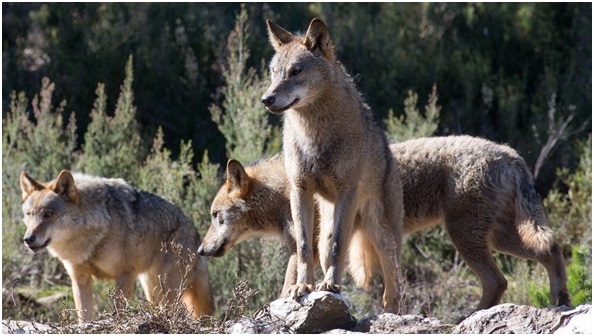
- 03 Aug 2023
Why in the News?
As per the regional government, the Iberian wolf (Canis lupus signatus) has been declared extinct in the historical region of Andalusia, located in the southernmost part of Iberia, since the year 2020.
About the Iberian Wolf:
- The Iberian wolf is a subspecies of the Grey wolf, distinguished by its prolonged isolation from other wolf populations for over a century.
- With the largest wolf population in Western Europe, this magnificent species is native to the Iberian Peninsula, encompassing Spain and Portugal.
- Thriving in diverse habitats, Iberian wolves inhabit forests, inland wetlands, shrublands, grasslands, pastures, and mountainous areas.
- These wolves lead a social lifestyle, living, hunting, and traveling in small packs.
- Each pack includes the alpha male and female, along with their young and older offspring.
- The alphas serve as the pack leaders, responsible for establishing territory, selecting den sites, tracking down, and hunting prey.
- Primarily carnivorous, the Iberian wolf's diet comprises various animal species.
- With regard to conservation, the Iberian wolf holds the status of "Vulnerable" according to the International Union for Conservation of Nature (IUCN).
PM Street Vendor’s AtmaNirbhar Nidhi (PM SVANidhi) Schemer (Indian Express)
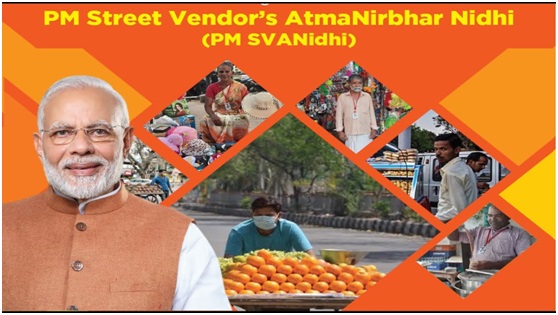
- 03 Aug 2023
Why in the News?
The Union Housing and Urban Affairs Ministry has recently announced a fresh target for its PM SVANidhi scheme, focusing on empowering street vendors.
About PM Street Vendor’s AtmaNirbhar Nidhi (PM SVANidhi) Scheme:
- Launched on June 01, 2020, by the Ministry of Housing and Urban Affairs, the PM SVANidhi Scheme aims to assist street vendors affected by the Covid-19 lockdown in reviving their livelihoods.
- As a micro-credit initiative, it provides street vendors with a collateral-free loan of Rs. 10,000 at a low-interest rate (below 12%) for one year, facilitating their financial recovery.
- Originally scheduled until March 2022, the scheme has now been extended till December 2024 with a focus on expanding the affordable loan corpus, encouraging digital transactions, and promoting holistic socio-economic development for street vendors and their families.
- Eligibility for the loan requires street vendors who were vending on or before March 24, 2020, and hold a certificate of vending issued by the Town Vending Committees (comprising local authorities and vendors) after conducting a survey.
- The scheme offers several benefits, including an interest subsidy of 7% per annum on timely loan repayment, no penalty on early repayment, cash back incentives up to Rs. 100 per month to promote digital transactions, and the possibility of credit limit escalation for prompt loan repayment.
- The Small Industries Development Bank of India (SIDBI) serves as the implementation agency for the scheme, ensuring efficient delivery and monitoring of financial support to street vendors across the country.
Lumpy Skin Disease (LSD) (Indian Express)
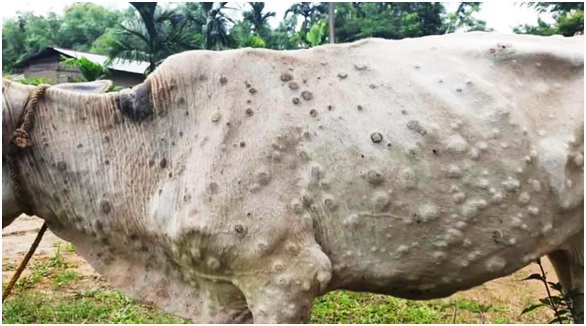
- 03 Aug 2023
Why in the News?
The Telangana High Court's division bench recently conveyed its discontentment over the absence of specific information regarding measures taken to manage the outbreak of Lumpy Skin Disease (LSD) in cattle.
What is Lumpy Skin Disease (LSD):
- Lumpy Skin Disease (LSD) is a highly infectious viral disease that affects cattle, ranging from acute to chronic in nature.
- It is caused by the lumpy skin disease virus (LSDV), belonging to the genus Capripoxvirus within the poxviridae family (related to smallpox and monkeypox viruses), but it is not zoonotic, meaning it does not spread to humans.
- Symptoms of LSD include the enlargement of lymph nodes, resulting in lumps on the cattle's skin, primarily appearing on the head, neck, limbs, udder, genitalia, and perineum.
- The cutaneous nodules, usually 2–5 cm in diameter, may develop into ulcers and scabs over time.
- Other signs of infection include high fever, reduced milk yield, nasal and ocular discharge, salivation, loss of appetite, depression, damaged hides, emaciation, infertility, and abortions.
- Transmission occurs through blood-feeding insects such as certain flies, mosquitoes, and ticks, as well as the movement of affected animals and contaminated equipment.
- Direct animal-to-animal transmission can also occur in some cases.
- While no direct antiviral treatment is available for LSD, supportive care is provided to infected animals, including the use of antibiotics, painkillers, and wound care sprays to alleviate symptoms.
- Vaccines are used to control disease transmission, as there is no specific cure.
- LSD is economically significant as it can lead to temporary reductions in milk production, temporary or permanent sterility in bulls, hide damage, and, in some instances, fatalities among the affected cattle population.
ZARTH App (The Hindu)
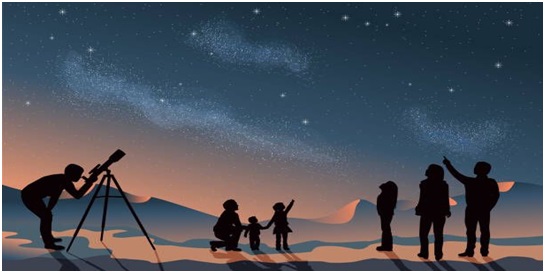
- 02 Aug 2023
Why in the News?
The Center for Data-Driven Discovery at the California Institute of Technology has recently unveiled the ZARTH app, enabling smartphone users to actively search for transients.
What is ZARTH App?
ZARTH (ZTF Augmented Reality Transient Hunter) combines the excitement of an augmented reality mobile game with serious scientific pursuits. This innovative app empowers users to engage in real science while enjoying a gaming experience.
Key Features:
- Leveraging the open-source Sky Map, the ZARTH app integrates daily data from the Zwicky Transient Facility (ZTF) at California's Palomar Observatory.
- The Palomar Observatory houses the prestigious 200-inch Hale reflector, one of the world's oldest and most powerful telescopes.
- The ZTF conducts bi-daily scans of the entire northern sky, generating crucial large-area sky maps with applications in tracking near-earth asteroids and studying supernovae.
- Each day, the ZARTH app receives real-time data on transients detected by the ZTF, including flaring stars, white dwarf binaries, active galactic nuclei, and other intriguing types.
- Transients are ranked based on rarity and significance, fostering a competitive environment among players who strive to earn points and daily credits displayed on leaderboards.
Offshore Areas Minerals (Development and Regulation) Amendment Bill, 2023 (Indian Express)
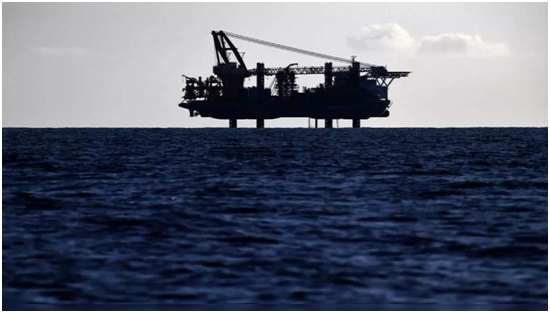
- 02 Aug 2023
Why in the News?
The Offshore Areas Minerals (Development and Regulation) Amendment Bill, 2023, has been successfully passed by the Lok Sabha.
The Offshore Areas Minerals (Development and Regulation) Amendment Bill, 2023:
It seeks to amend the existing Offshore Areas Mineral (Development and Regulation) Act, 2002, to regulate mining activities in India's maritime zones.
The key highlights of the Bill include:
- Reservation of Offshore Areas: The government is empowered to reserve offshore areas not under any operating rights.
- Composite Licence and Production Lease: The administering authority can grant composite licenses or production leases to the government or a government company.
- Fixed Production Lease Period: The provision for renewal of production leases is removed, and a fixed period of fifty years, akin to the Mines and Minerals (Development and Regulation) Act 1957, is introduced.
- Auction-Based Allocation: Private sector entities can acquire production leases through auction by competitive bidding.
- Operating Rights for Government Entities: Operating rights without competitive bidding can be granted to government or government companies or corporations in mineral-bearing areas reserved by the central government.
- Atomic Minerals: For atomic minerals, exploration licenses or production leases can only be granted to the government or government corporations.
- Production Commencement Timeline: A four-year timeline for production commencement and dispatch after the execution of composite licenses or production leases is introduced, with a two-year timeline (extendable by one year) for re-commencement of production and dispatch after discontinuation.
- Framing Rules for Conservation and Environment: The central government is enabled to establish rules for mineral conservation and systematic development in offshore areas, along with measures to protect the environment and control pollution resulting from exploration or production operations.
eSanjeevani (India's Integrated Telemedicine Solution ) (Indian Express)
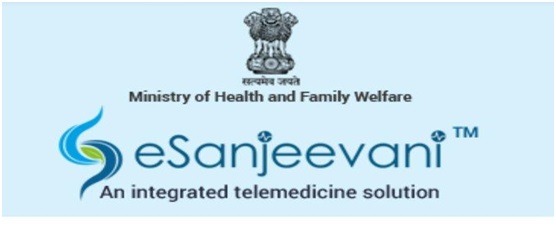
- 02 Aug 2023
Why in the News?
The Union Health Minister revealed to the Rajya Sabha that the eSanjeevani telemedicine application, introduced by the Centre, has successfully conducted a remarkable 14,17,81,384 teleconsultations.
About eSanjeevani:
- eSanjeevani is an integrated telemedicine solution, hosted on the cloud, developed by the Ministry of Health and Family Welfare, Government of India.
- This telemedicine app facilitates seamless communication between doctors and patients as well as doctor-to-doctor interactions.
- The Centre for Development and Advanced Computing (C-DAC), Mohali, is responsible for the design, development, deployment, and maintenance of this platform.
- The eSanjeevani system consists of two essential modules:
- eSanjeevani AB-HWC:
- This module serves as a doctor-to-doctor telemedicine platform, strategically implemented across all Health and Wellness Centres (HWCs) in the country under the Ayushman Bharat Scheme.
- It operates on a Hub-and-Spoke model, with zonal hubs comprising MBBS/Specialty/Super-Specialty doctors connected to state-level Ayushman Bharat-Health and Wellness Centers.
- eSanjeevani OPD:
- Rolled out in 2020 during the initial Covid-19 lockdown when outpatient departments (OPDs) were closed, this module enables patient-to-doctor remote consultations.
- People can access outpatient services from the comfort of their homes, ensuring healthcare accessibility during challenging times.
- eSanjeevani represents a significant step towards enhancing healthcare accessibility and digital healthcare services across India.
Infrastructure investment trust (InvIT) (Business Standard)
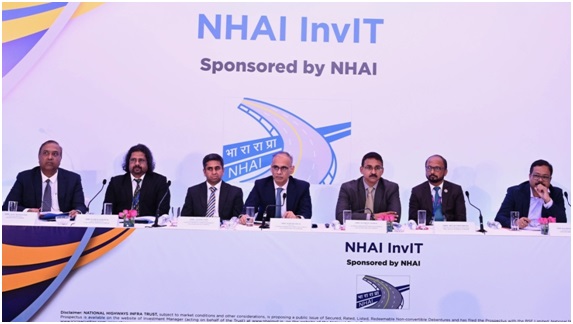
- 02 Aug 2023
Why in the News?
The government is actively developing a proposal to introduce a new Infrastructure Investment Trust (InvIT) dedicated to national highways. This initiative aims to enable domestic retail investors to own units of the trust, expanding opportunities for individual investors to participate in highway infrastructure projects.
What is Infrastructure Investment Trust (InvIT)?
- An Infrastructure Investment Trust (InvIT) functions as a Collective Investment Scheme, offering a pathway for both individual and institutional investors to directly invest in diverse infrastructure projects.
- Operating akin to mutual funds, InvITs are established as trusts and undergo registration with Sebi (Securities and Exchange Board of India).
- InvITs involve four key parties:
- the Trustee, Sponsor(s), Investment Manager, and Project Manager. The Sebi-certified Trustee assumes the crucial role of overseeing the InvIT's performance. Meanwhile, the Sponsor(s) act as the company's promoters responsible for creating and setting up the InvIT.
- Overall, InvITs present an attractive investment option, as they allow investors to participate in the development of vital infrastructure projects while enjoying the benefits of a collective investment structure similar to mutual funds.
What is NHAI InvIT?
- NHAI InvIT is an infrastructure investment trust proudly sponsored by the National Highways Authority of India (NHAI) to bolster the government's National Monetisation Pipeline (NMP) initiative.
- This Trust has been established by NHAI in accordance with the Indian Trusts Act, of 1882, and adheres to the regulations set forth by SEBI (Security and Exchange Board of India).
- The NHAI InvIT plays a vital role in supporting the nation's infrastructure development by providing a platform for investors to participate in highway projects' growth and monetization.
- Through this innovative investment vehicle, NHAI aims to tap into private and institutional investments to enhance the funding and execution of critical infrastructure projects across the country, ultimately contributing to India's overall economic progress.
TransLunar Injection (TLI) (The Hindu)
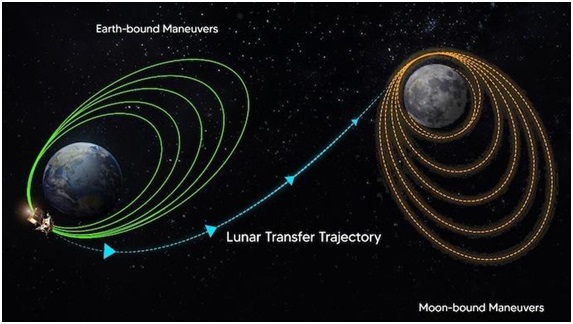
- 02 Aug 2023
Why in the News?
The TransLunar Injection (TLI) was performed successfully from ISRO Telemetry, Tracking and Command Network (ISTRAC) in Bengaluru recently.
What is the TransLunar Injection (TLI)?
- TransLunar Injection (TLI) is a crucial space mission maneuver, propelling spacecraft from Earth's orbit to a trajectory aimed at reaching the Moon.
- An essential step in lunar missions, TLI allows spacecraft to break free from Earth's gravity and commence their journey toward the Moon.
- TLI is executed when the spacecraft reaches the perigee, the closest point to Earth in its orbit.
- During TLI, the spacecraft's propulsion system ignites its engines, accelerating the craft and providing the necessary speed to escape Earth's gravitational pull.
- The thrust and duration of the TLI burn are determined by factors like spacecraft mass, Earth's orbital velocity, and specific mission objectives.
- Following a successful TLI, the spacecraft is directed onto a lunar trajectory, continuing its autonomous journey to the Moon without further reliance on Earth's propulsion.
- Subsequent to TLI, the spacecraft enters a transfer orbit, an elliptical path that intersects with the Moon's orbit.
- The spacecraft traverses this highly eccentric orbit until it reaches the lunar surface.
- As the spacecraft approaches the Moon, additional maneuvers like lunar orbit insertion (LOI) may be executed to enter lunar orbit or facilitate landing, based on the mission's objectives.
- TLI has been effectively utilized in numerous Moon missions, including Apollo, Chang'e, and Artemis missions.
National Digital Nagrik Forum (Indian Express)
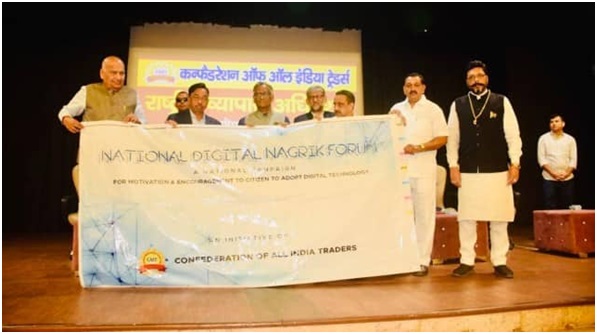
- 01 Aug 2023
Why in the News?
The forum by the Confederation of All India Traders (CAIT) aims to raise awareness about digital regulations and help build the capacities of citizens to engage with innovation via expert sessions and instructional materials.
About the National Digital Nagrik Forum:
- The National Digital Nagrik Forum is an online platform with the primary goal of advancing the rights of traders, consumers, and various sections of society, while also influencing policy to foster the growth of the digital trade economy.
- Through expert sessions and instructional materials, the forum aims to raise awareness about digital regulations and empower citizens to engage with innovation effectively.
- The main objective is to shape policy discourse around the digital economy trade in India, aligning with the Government of India's vision of establishing a trillion-dollar digital economy.
- Simultaneously, it seeks to maintain an open, safe, trusted, and accountable Internet ecosystem.
- The forum will conduct awareness camps, digital and physical dialogues, and training sessions.
- It will also engage in targeted outreach to stakeholders from the government, private sector, and civil society.
- The National Digital Nagrik Forum will concentrate on five core themes:
- The first pillar focuses on consumer protection and online safety, with a central emphasis on efficient grievance redressal mechanisms.
- The second pillar addresses the challenges of digital cartelization, advocating for a level-playing field to discourage discriminatory and anti-competitive practices in the online world.
- The third pillar explores the potential of Indian digital technologies to transform retail and industrial trade, while also contributing to employment growth and expanding investment opportunities.
- The fourth pillar advocates for a first principles-based taxation policy that fosters certainty and productivity, especially for sectors with high growth potential. It simultaneously works to prevent illegal activities like tax evasion and money laundering.
- The fifth pillar conducts research on emerging technologies such as blockchain and artificial intelligence to assess their impact on retail trade and ensure the protection of consumers' interests.
- The National Digital Nagrik Forum aims to make significant contributions towards shaping a vibrant digital economy in India, fostering fair trade practices, and safeguarding the interests of both consumers and traders.
Room-temperature Superconductor (The Hindu)

- 01 Aug 2023
Why in the News?
Korean researchers claim to have developed a superconductor that can operate at room temperature and ambient pressure.
What have the researchers developed?
- The researchers assert that they have created a superconductor named LK-99, which operates at room temperature and under ambient pressure.
- LK-99 is a combination of powdered compounds containing lead, oxygen, sulphur, and phosphorus.
- Upon heating at extremely high temperatures, it transforms into a dark grey solid.
- The potential significance of this discovery is immense, provided other laboratories can replicate these results.
- Nevertheless, some researchers remain skeptical as this study has not undergone peer review, and the results must be independently reproduced by other scientific groups.
What is a Superconductor?
- A superconductor is a material that exhibits superconductivity, a unique state of matter characterized by the absence of electrical resistance and the exclusion of magnetic fields.
- In a superconductor, an electric current can flow indefinitely without any hindrance.
- Superconductors have significant practical applications in our everyday lives.
- In 1933, Walther Meissner and Robert Ochsenfeld discovered that superconductors act as perfect diamagnets, repelling magnetic fields, a phenomenon known as the Meissner effect.
- This property makes them ideal for applications like magnetic resonance imaging (MRI).
- However, achieving superconductivity typically requires extremely low temperatures.
- Currently, researchers are actively exploring and developing superconductors that can operate at room temperature, a groundbreaking advancement that would revolutionize various technologies and industries.
How will the room-temperature superconductors help?
- The use of room-temperature superconductors can offer significant benefits in various applications.
- Typically, the critical temperature of conventional superconductors is below 10 Kelvin (-263 degrees Celsius), whereas room temperature is around 20-22°C.
- By having superconductors that function at room temperature, the cost of electricity grids, computer chips, magnets for maglev trains, energy-storage devices, and fusion reactors can be reduced significantly.
- This is achieved through electricity and cost savings on coolants, as the need for extreme cooling methods is eliminated.
- The widespread adoption of room-temperature superconductors holds the potential to revolutionize multiple industries, making them more efficient and cost-effective.
Nasha Mukt Bharat Abhiyan (NMBA) (The Hindu)
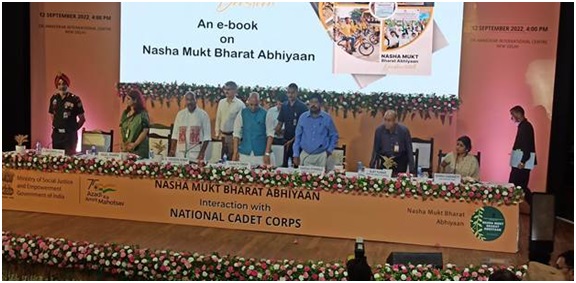
- 01 Aug 2023
Why in the News?
During the Man ki Baat program, the Prime Minister announced that India achieved a remarkable feat by destroying 10 lakh kilograms of drugs worth ?12,000 crore in the previous year.
What is Nasha Mukt Bharat Abhiyan (NMBA)?
- Launched on: The NMBA was launched on 15th August 2020.
- Nodal Ministry: The Ministry of Social Justice & Empowerment oversees the implementation of NMBA.
- Aim: The primary objective of NMBA is to raise awareness about the harmful consequences of substance abuse, with a special focus on youth, women, and children.
- It aims to reach out to higher education institutes, university campuses, schools, and the broader community, encouraging community involvement and ownership of the initiative.
- Implementation: NMBA is implemented in 372 vulnerable districts, identified based on the findings of the first Comprehensive National Survey and inputs from the Narcotics Control Bureau (NCB).
- Significance:
- NMBA targets and engages various stakeholders directly or indirectly affected by substance abuse, as well as those vulnerable to it.
- The major beneficiaries of NMBA include youth, women, children, educational institutions, civil society, and the community at large.
- This approach emphasizes community involvement rather than just organizational participation in addressing the issue of substance abuse.
Cell-free DNA (The Hindu)
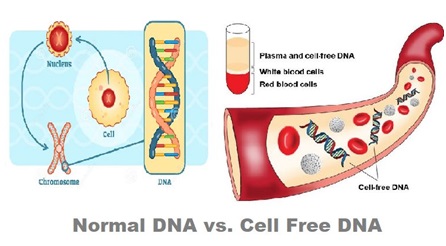
- 01 Aug 2023
Why in the News?
Over the past two decades, as genome sequencing technologies have become increasingly accessible, scientists have made significant strides in understanding the applications of Cell-free DNA.
Regarding Cell-free DNA:
- In the human body, a significant portion of the DNA in the genome is safely enclosed within cells, safeguarded by specific proteins to prevent degradation.
- However, in various circumstances, certain DNA fragments are liberated from their confines and can be found outside the cells, circulating in body fluids.
- These minute fragments of nucleic acids are commonly referred to as cell-free DNA (cfDNA).
How Cell-free DNA is generated/released?
- The generation and release of Cell-free DNA (cfDNA) can occur through various mechanisms.
- One such process is when a cell undergoes cell death, leading to the degradation of nucleic acids and subsequent release of cfDNA.
- The degradation of cfDNA is influenced by a diverse set of processes, resulting in variations in the amount, size, and origin of cfDNA.
- Furthermore, this release of cfDNA can be associated with different biological processes, including those essential for normal development, the progression of certain cancers, and various other diseases.
- The generation and release of cfDNA can be triggered by a range of situations and processes, making it a versatile biomarker with potential implications in various health conditions.
Applications of Cell-free DNA (cfDNA):
- One of the most prevalent uses of cfDNA is in non-invasive prenatal testing, where it aids in screening fetuses for specific chromosomal abnormalities.
- Also, cfDNA serves as a valuable tool for comprehending human diseases and leveraging this knowledge to enhance diagnosis, monitoring, and prognosis.
- cfDNA plays a crucial role in understanding the rejection of transplanted organs by the body.
- It shows promise as a potential biomarker for various neurological disorders, including Alzheimer's disease, neuronal tumors, stroke, and traumatic brain injury.
Cocos (Keeling) Islands (The Hindu)
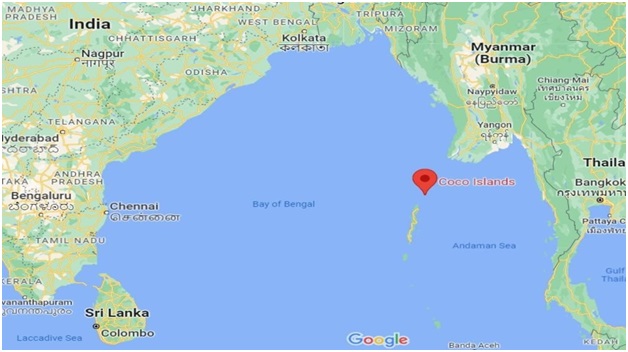
- 01 Aug 2023
Why in the News?
A maritime patrol aircraft from the Indian Navy and a transport aircraft from the Indian Air Force (IAF) made a visit to Australia's Cocos (Keeling) Islands (CKI) recently.
About Cocos (Keeling) Islands:
- Location:
- The Cocos (Keeling) Islands are situated in the eastern Indian Ocean, approximately 2,900 kilometers (1,800 miles) northwest of the Australian city of Perth.
- Geography:
- Comprising coral atolls and islands, the archipelago includes North Keeling Island and the South Keeling Islands.
- Administrative Headquarters:
- The territory's administrative headquarters are located on West Island, situated in the southern atoll.
- Climate:
- The islands experience a warm and humid climate.
- Vegetation:
- The predominant vegetation consists of coconut palms, which were previously cultivated for copra on plantations.
- On North Keeling and Horsburgh islands, coarse grass serves as the primary ground cover.
- National Park:
- The northern atoll is home to Australia's most remote Commonwealth National Park, known as the Pulu Keeling National Park.
- Inhabitants:
- The population of the islands mainly comprises descendants of the original plantation workers, predominantly of Malay origin.
- Administration:
- The Cocos (Keeling) Islands are governed by an administrator appointed by the Australian governor-general. The islands became an Australian territory under the Cocos (Keeling) Islands Act 1955.
Worldcoin Project (The Hindu)
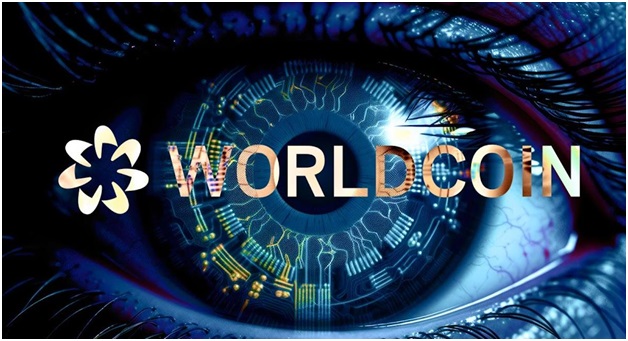
- 31 Jul 2023
Why in the News?
In a recent announcement, the CEO of OpenAI officially reintroduced his Worldcoin project, which had previously taken a backseat to the widespread popularity of ChatGPT.
What is Worldcoin Project?
- The Worldcoin Project aims to establish a digital network that enables everyone to participate and claim some form of stake in the digital economy.
- The project operates on a straightforward model:
- Individuals can prove their uniqueness as humans by allowing their eyes to be scanned, and in return, they receive a cryptocurrency reward and an identification called a "World ID."
- Worldcoin relies on a device called "Orb," which is used by volunteers known as "Orb operators."
- These operators scan a person's iris pattern to collect their biometric data and facilitate the issuance of a World ID through the World app.
- Participants who have been scanned can use the World app to receive the Worldcoin cryptocurrency at regular intervals or engage in transactions using their World ID wherever applicable.
- This process, known as "proof of personhood," ensures that individuals cannot register multiple times to gain more crypto rewards.
Voyager 2 Spacecraft (HT)
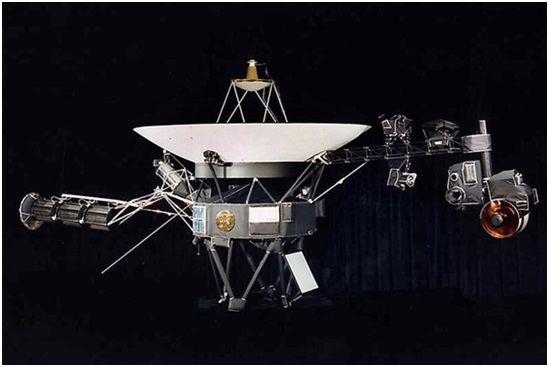
- 31 Jul 2023
Why in the News?
NASA’'s Voyager 2 spacecraft, which is venturing through space between stars, faces communication problems due to antenna misalignment. .
About Voyager 2 Spacecraft:
- Voyager 2 is an iconic interplanetary spacecraft launched by NASA on August 20, 1977, with the primary objective of exploring the outer planets of our solar system.
- It is part of the Voyager program, and along with its twin, Voyager 1, it has provided invaluable insights into the distant regions of our cosmic neighborhood.
- The spacecraft is equipped with a suite of scientific instruments to study various aspects of the planets it encounters, including their atmospheres, magnetic fields, and planetary surfaces.
- Voyager 2 successfully conducted close flybys of Jupiter in 1979, Saturn in 1981, Uranus in 1986, and Neptune in 1989, becoming the first and only spacecraft to visit these four giant gas planets.
- Beyond its initial mission, Voyager 2 continues to be operational and remains in communication with Earth, traveling at an impressive speed of approximately 34,000 miles per hour (55,000 kilometers per hour).
- It has since left the heliosphere, the region influenced by the Sun's magnetic field, and entered interstellar space, becoming the second human-made object to do so after Voyager 1.
- Throughout its journey, Voyager 2 has provided a wealth of data and discoveries about the outer planets and their moons, as well as valuable information about the space environment outside the solar system.
- It has captured breathtaking images of planetary systems, revealing the beauty and complexity of the outer planets and their fascinating moons.
- The spacecraft continues to be a remarkable testament to human ingenuity and curiosity as it ventures farther into the cosmos, providing us with an enduring legacy of exploration and knowledge about our celestial neighbors.
GOBARdhan Initiative (PIB)
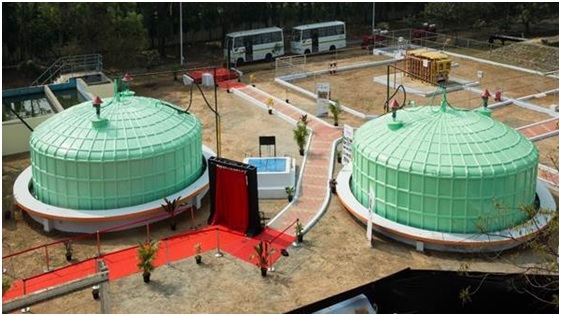
- 31 Jul 2023
Why in the News?
Recently, Union Minister for Jal Shakti has launched the Unified Registration Portal for GOBARdhan.
About GOBARdhan Initiative:
- GOBARdhan (Galvanizing Organic Bio-Agro Resources Dhan) initiative was launched in 2018.
- Aim:
- The primary goal of the initiative is to convert waste to wealth by promoting a circular economy.
- Nodal Ministry:
- The GOBARdhan Initiative is under the Department of Drinking Water and Sanitation, Ministry of Jal Shakti.
- Gobardhan is an integral part of Swachh Bharat Mission (Gramin) Phase II, focusing on Solid Waste Management.
- Objectives:
- To assist villages in safely managing their cattle and agricultural waste, leading to cleaner villages.
- To help communities convert cattle and organic waste into wealth using treatment systems.
- To transform organic waste, especially cattle waste, into biogas and organic manure for utilization in rural areas.
- To promote environmental sanitation and control vector-borne diseases by effectively disposing of waste in rural regions.
- To create employment and income-generation opportunities in rural areas by involving entrepreneurs, Self-Help Groups (SHGs), and youth groups in setting up, operating, and managing GOBARdhan units.
- Financial Incentive:
- The Government of India provides technical assistance and financial support of up to 50 lakhs for each district to achieve the safe disposal of cattle and organic waste as part of the initiative.
ULLAS Initiative (PIB)
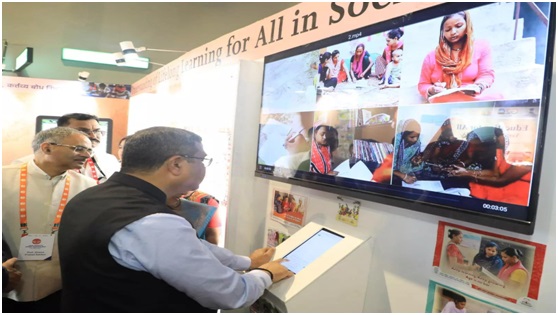
- 31 Jul 2023
Why in the News?
In New Delhi, the logo, slogan "Jan Jan Sakshar," and mobile application of ULLAS were recently unveiled by Shri Dharmendra Pradhan, the Union Minister of Education and Minister of Skill Development and Entrepreneurship.
About the ULLAS Initiative:
- The ULLAS (Understanding Lifelong Learning for All in Society) initiative, holds the potential to revolutionize education and literacy nationwide.
- Its primary objective is to create a learning ecosystem that reaches every individual, bridging the gaps in basic literacy and essential life skills.
- Targeting citizens aged 15 and above who missed the opportunity to attend formal schooling, the initiative imparts basic education, digital and financial literacy, and critical life skills.
- Implementation is driven by volunteerism, emphasizing community participation.
- The slogan of the initiative is "ULLAS: Nav Bharat Saksharta Karyakram."
- To support its goals, the ULLAS app was launched, designed with user-friendliness and interactivity in mind.
- Available on both Android and iOS platforms, the app serves as a digital gateway for learners to access a diverse range of learning resources through the DIKSHA portal of NCERT.
- The ULLAS app facilitates the registration of learners and volunteers, either through self-registration or with the assistance of surveyors.
- Significance:
- This app plays a crucial role in promoting functional literacy, vocational skills, and vital life skills such as financial literacy, legal literacy, digital literacy, and empowering citizens to actively participate in nation-building efforts.
- Furthermore, the ULLAS Initiative nurtures a culture of continuous learning and knowledge-sharing within communities across India, fostering a brighter future for the nation.
Parkachik Glacier (Indian Express)
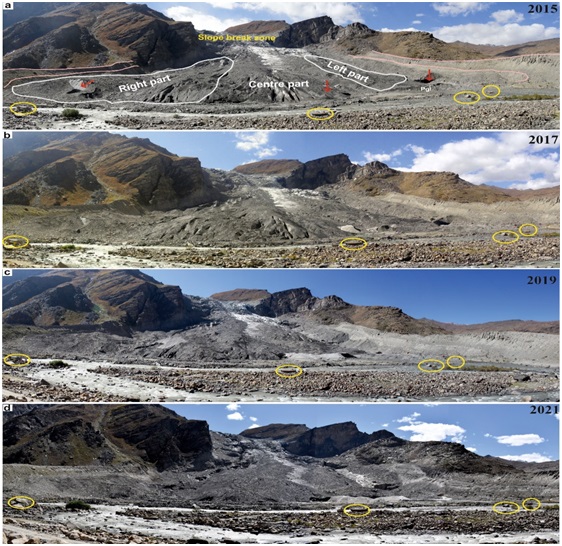
- 31 Jul 2023
Why in the News?
According to a recent study by scientists from the Wadia Institute of Himalayan Geology, the rapid ice melt of the Parkachik Glacier in Ladakh is anticipated to lead to the formation of three glacial lakes.
Regarding the Parkachik Glacier:
- The Parkachik Glacier, stretching 14 km in length and covering approximately 53 square km, stands as one of the largest glaciers in the Suru River valley.
- This valley is situated within the southern Zanskar Ranges of the western Himalayas.
- The glacier's accelerated melting can be attributed to two primary factors.
- Firstly, the effects of global warming and rising temperatures in the area contribute to this phenomenon.
- Secondly, its lower altitude compared to other glaciers in the Zanskar region also plays a significant role in the rapid melting process.
- Also, its relatively lower altitude compared to other glaciers in the Zanskar region contributes to its vulnerability to melting.
Important details about the Zanskar Ranges:
- Location:
- Zanskar is a high-altitude semi-desert situated on the Northern flank of the Great Himalayan Range.
- Climatic Influence:
- The Zanskar Ranges serve as a climatic barrier, shielding Ladakh and Zanskar from much of the monsoon weather. Consequently, the region experiences a pleasantly warm and dry climate during the summer months.
- Flora:
- The lower reaches of Zanskar's valleys harbor most of its vegetation, primarily consisting of alpine and tundra species.
- Fauna:
- Zanskar is home to diverse wildlife, including marmots, bears, wolves, snow leopards, kiangs (Tibetan wild asses), bharals (Himalayan blue sheep), alpine Ibex, wild sheep and goats, and the impressive lammergeier, also known as the bearded vulture.
National Coal Index (AIR)
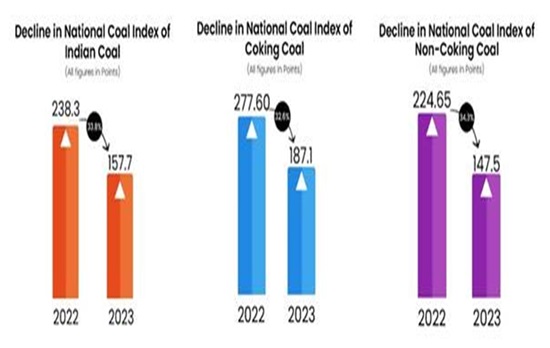
- 27 Jul 2023
Why in the News?
The National Coal Index (NCI) has shown a significant decline of 33.8 per cent in May this year at 157.7 points compared to May last when it was at 238.3 points. It indicates a strong supply of coal in the market, with sufficient availability to meet the growing demands.
About National Coal Index:
- Launch Date:
- The National Coal Index was introduced in the year 2020.
- Ministry:
- Developed under the purview of the Ministry of Coal, India.
- The esteemed Indian Statistical Institute, Kolkata, played a key role in creating the index as part of India's transition away from coal.
- Price Index:
- It serves as a price index, reflecting changes in the price level of coal during a specific month relative to the fixed base year.
- Objective:
- The primary objective of the National Coal Index is to offer an accurate reflection of the market price of coal.
- Base Year:
- The base year for the index is 2017-18.
- Inclusive Prices:
- The price index amalgamates coal prices from various sales channels, including Notified Prices, Auction Prices, and Import Prices.
- The National Coal Index combines coal prices from all sales channels, including notified prices, auction prices and import prices.
- It serves as a reliable indicator of market dynamics, providing valuable insights into coal price fluctuations.
- The National Coal Index (NCI) has shown a significant decline of 33.8% in May 2023 compared to May 2022, which suggests significant reduction in coal prices.
- This indicates a strong supply of coal in the market, with sufficient availability to meet the growing demands.
Resource Efficiency and Circular Economy Industry Coalition (RECEIC) (Indian Express)
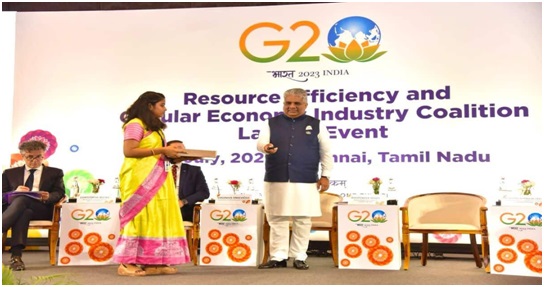
- 27 Jul 2023
Why in the News?
Union Environment, Forest and Climate Change Minister Bhupender Yadav on Thursday launched a Resource Efficiency Circular Economy Industry Coalition (RECEIC), conceptualised under India’s G20 Presidency, to promote the practices of resource efficiency and circular economy globally.
About Resource Efficiency and Circular Economy Industry Coalition (RECEIC):
- RECEIC was launched in 2023 at Chennai, Tamil Nadu, with the honorable presence of Shri Bhupender Yadav, Minister for Environment, Forest, and Climate Change.
- The launch event witnessed the participation of distinguished guests, including the Commissioner on Environment from the European Union and esteemed Ministers from Canada, France, Italy, Denmark, Mauritius, and the United Arab Emirates.
- Industry-Driven Initiative:
- RECEIC is an industry-led initiative with a primary goal of fostering global resource efficiency and circular economy practices.
- Embracing the circular economy model, RECEIC promotes production and consumption practices involving sharing, leasing, reusing, repairing, refurbishing, and recycling materials and products to maximize their utility.
- Sustainable Impact:
- The coalition is envisioned to be a self-sustaining entity, committed to lasting environmental sustainability, beyond India's G20 Presidency.
- Founding Members:
- With 39 companies headquartered in 11 different countries, the coalition boasts a diverse group of founding members.
- As a collaborative platform, RECEIC fosters knowledge-sharing, best practice exchange, and the adoption of sustainable approaches among participating industries.
Millipede species (India Today)
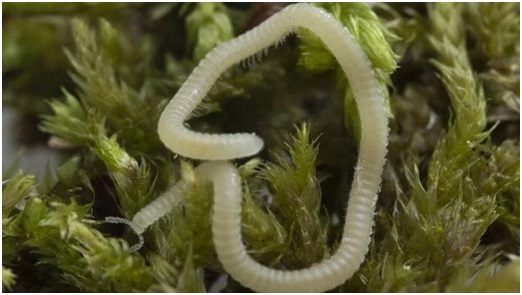
- 27 Jul 2023
Why in the News?
In a recent discovery, a previously unknown species of millipede was found dwelling beneath the city of Los Angeles, United States.
About Millipede Species:
- The recently discovered species belongs to the category of thread Millipedes.
- It measures approximately the length of a paperclip but is as slim as pencil lead.
- Scientifically identified as Illacme socal, this millipede is translucent and displays sinuous movements akin to a jellyfish tentacle.
- The creature's habitat lies about four inches beneath the ground, where it burrows and secretes distinctive chemicals, exhibiting unique behavior.
- Remarkably, this millipede is blind and relies on hornlike antennas extending from its head to navigate its surroundings.
What are Millipedes?
- Millipedes belong to the arthropod class Diplopoda, placing them in the same group as centipedes.
- These invertebrates exhibit a cylindrical or slightly flattened body structure.
- Despite their name, "millipede," which translates to "a thousand feet," these creatures do not actually have a thousand feet. However, they possess numerous legs on their bodies.
- The millipede's body is segmented, and each segment carries two sets of legs attached to the underside.
- Diet-wise, millipedes are detritivores, subsisting on dead organic matter found in the earth, such as damp wood pieces, decaying leaves, and other materials that are naturally present in their moist underground habitat.
Rare ‘Ureilite’ Meteorite (Weather Channel)

- 27 Jul 2023
Why in the News?
Recently, a team of scientists from Allahabad University and the University of Bern, Switzerland, made an intriguing discovery. They unveiled that the Dhala crater was formed by the impact of an exceedingly uncommon and ancient meteorite called Ureilite.
Key Facts About Ureilite:
- Ureilite is an extraordinary type of meteorite, characterized by its rarity, making up only a minuscule portion of the meteorites found on Earth.
- The name "Ureilite" originates from the location of its first discovery, the Novo Urei village in Russia.
- Composition:
- Ureilites are primarily composed of silicate rock, with olivine and pyroxene being the dominant minerals.
- They also contain a smaller fraction of carbon, which can be in the form of either diamond or graphite, along with metal sulphides and a few fine-grained silicates.
- Elongated cavities are commonly found, typically oriented in the same direction.
- Lack of Chondrules:
- Unlike many other stony meteorites, ureilites do not contain chondrules, which are small, spherical grains that formed in the early solar system.
- Primitive Nature:
- Ureilites are regarded as primitive meteorites because their composition closely resembles the material from which the solar system originated.
- Their unique characteristics offer valuable insights into the early stages of our cosmic environment.
About Dhala Crater:
- Dhala Crater holds significance as India's oldest and largest impact crater, with an estimated formation age of approximately 2500 million years.
- Named after the village Dhala, it remains an eroded remnant of the original impact structure.
- Situated in the Shivpuri district of Madhya Pradesh, the crater boasts an impressive size, spanning a massive 11 km in diameter, making it the largest impact crater in Asia.
Urea Gold (ET)
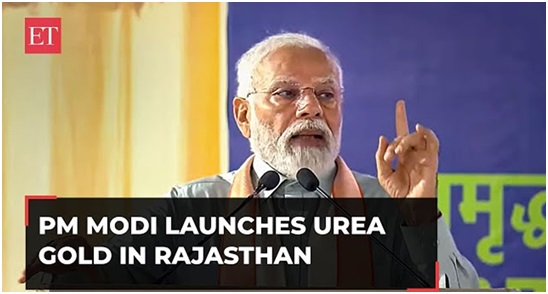
- 27 Jul 2023
Why in the News?
During a recent event held in Rajasthan's Sikar, the Prime Minister unveiled "Urea Gold," a novel type of Urea fertilizer.
About Urea Gold:
- Urea Gold is an advanced variety of Urea that features a Sulphur coating.
- Its primary purpose is to address soil Sulphur deficiency while also offering cost-saving benefits to farmers.
- In comparison to the existing Neem-coated urea, Urea Gold stands out due to its superior economic viability and efficiency.
- The gradual release of nitrogen facilitated by its Sulphur coating enhances crop uptake, and the inclusion of humic acid extends its fertilizing lifespan.
- Notably, Urea Gold not only acts as a substitute for traditional urea but also contributes to a reduction in overall fertilizer usage.
- According to a report, using 15 kg of Urea Gold can provide comparable benefits to 20 kg of conventional urea, making it a more efficient and effective choice for farmers.
INDIAai (ET)

- 26 Jul 2023
Why in the News?
In a recent development, INDIAai and Meta India entered into a memorandum of understanding (MoU) to create a collaborative framework for cooperation and partnership in the realm of artificial intelligence (AI) and emerging technologies.
About INDIAai:
- INDIAai, the National artificial intelligence Portal of India, was launched on 28th May 2020 as a comprehensive platform.
- It serves as a knowledge portal, research organization, and ecosystem-building initiative.
- Its primary aim is to foster unity and encourage collaborations within India's AI ecosystem by bringing together various entities.
- This joint initiative is supported by the Ministry of Electronics and IT (MeitY), the National e-Governance Division (NeGD), and NASSCOM.
- NeGD, established in 2009 under the Digital India Corporation (a not-for-profit company set up by MeitY), plays a crucial role in this venture.
- NASSCOM, a prominent not-for-profit industry association, serves as the apex body for India's IT and IT-enabled products and services sector.
- INDIAai functions as the central knowledge hub for artificial intelligence and related fields, catering to aspiring entrepreneurs, students, professionals, academics, and all other stakeholders in the domain.
What is Artificial intelligence (AI)?
- Artificial Intelligence (AI) is a branch of computer science: It involves the development of intelligent machines that can perform tasks typically requiring human intelligence.
- Machine Learning and Algorithms: AI systems utilize machine learning algorithms to process vast amounts of data, learn from it, and improve their performance over time without explicit programming.
- Applications in various fields: AI finds applications in diverse domains, including natural language processing, image recognition, robotics, healthcare, finance, and autonomous vehicles, among others. Its goal is to mimic human cognitive abilities, such as problem-solving, reasoning, and decision-making.
Maitree Super Thermal Power Project (STPP) (ET)

- 26 Jul 2023
Why in the News?
The synchronization of the 660-MW unit-2 of the 1,320-MW Maitree Super Thermal Power Project (STPP) with the electricity grid in Bangladesh was recently announced by the state-owned engineering firm Bharat Heavy Electricals.
- Location:
- It is situated in Rampal, in the Bagerhat district of Bangladesh's Khulna division.
- It will be one of the biggest coal-fired power plants in Bangladesh, along with the Payra Power Plant in Pataukhali, which commenced test production in January 2020.
- Capacity and Cost:
- The power station has a capacity of 1320 MW (2x660 MW) and is estimated to cost around $2 billion.
- Financing Plan:
- The project is being developed under India's tax concessions finance plan, aiming to enhance Bangladesh's national grid by an additional 1320 MW.
- Financed through a £1.3bn ($1.6bn) loan from the Export-Import (EXIM) Bank of India.
- Implementing Entity:
- India’s Bharat Heavy Electricals Limited (BHEL) is responsible for constructing the power plant on behalf of Bangladesh-India Friendship Electricity Company Private Limited (BIFPCL).
- Commercial Operation:
- The first unit of the super thermal power plant is expected to commence commercial operation in early October, representing a significant milestone in the growing cooperation between India and Bangladesh in the power industry.
- Future Expansion:
- In the subsequent year, the power plant's Unit-II, also known as the Rampal coal-fired power project, is scheduled for implementation.
Ichamati River (PIB)
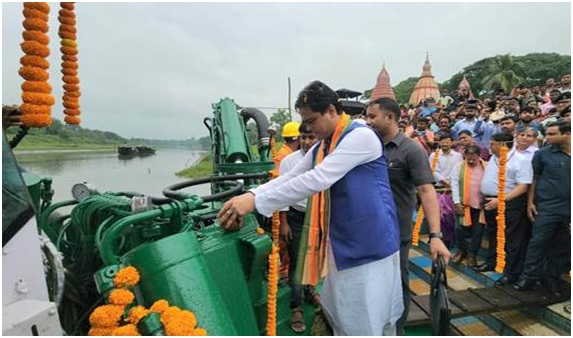
- 06 Oct 2023
Why in the News?
The Minister of State for Ports, Shipping, and Waterways recently launched the dredging project on National Waterways 44 in the Ichamati River of West Bengal.
About the Ichamati River:
- The Ichamati River crosses both India and Bangladesh.
- It serves as a natural boundary between the two nations India and Bangladesh.
- It has three main sections.
- The longest part originates from the Mathabhanga River, a branch of the Padma River, flowing for 208 kilometers before merging with the Kalindi River near Hasnabad in North 24 Parganas and Debhata in the Satkhira District of Bangladesh.
- Additionally, the Ichhamati River and its tributaries together create a large oxbow lake complex in the North 24-Paraganas district, near Bangaon.
NanoPtA (The Hindu)
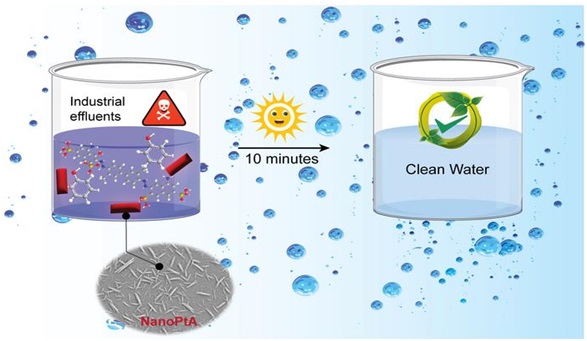
- 06 Oct 2023
Why in the News?
Scientists at the Indian Institute of Science's Materials Research Centre (MRC) have recently created a novel enzyme mimic known as NanoPtA.
About NanoPtA:
- The research team at the Materials Research Centre (MRC), Indian Institute of Science (IISc), has created a unique platinum-based nanozyme called NanoPtA.
- This nanozyme can be turned into a powder for use in industries.
- When NanoPtA encounters wastewater, the molecule's benzene rings and long alkyl chains engage in multiple non-covalent interactions.
- Individual NanoPtA molecules link together to form tape-like structures that emit light, which is the source of its oxidizing capability.
- In the presence of sunlight, this nanozyme can break down pollutants in wastewater, reducing its toxicity.
- Remarkably, the nanozyme can rapidly degrade even small amounts of common contaminants like phenols and dyes (micromolar levels) within ten minutes when exposed to sunlight.
- The researchers also observed that the NanoPtA complex remained stable for up to 75 days at room temperature.
Applications:
- Besides wastewater treatment, this nanozyme could find applications in healthcare and serve as a valuable diagnostic tool for neurological and neurodegenerative diseases.
BlueWalker 3 Satellite (The Hindu)
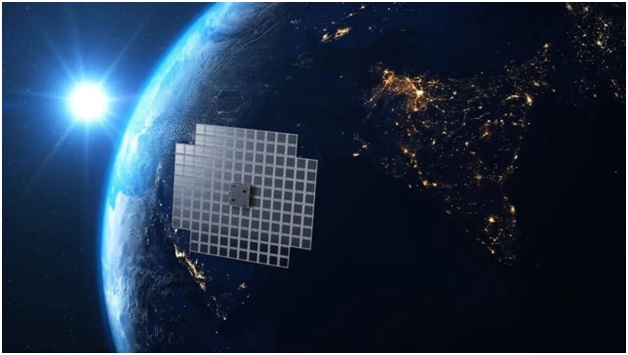
- 06 Oct 2023
Why in the News?
An international team of scientists has recently published a paper that explains how the prototype BlueWalker 3 satellite has affected the field of astronomy.
About the BlueWalker 3 satellite:
- The BlueWalker 3 satellite is a prototype that's part of a constellation owned by AST SpaceMobile.
- Launched in September 2022, it's notable for being one of the brightest objects in the night sky, even outshining the brightest stars.
- This satellite represents the largest-ever commercial communications array in low-Earth orbit, specifically designed to directly communicate with cellular devices at 5G speeds using 3GPP standard frequencies.
- Interestingly, the satellite operates at wavelengths close to those observed by radio telescopes, which could potentially interfere with radio astronomy.
National Turmeric Board (NTB) (PIB)
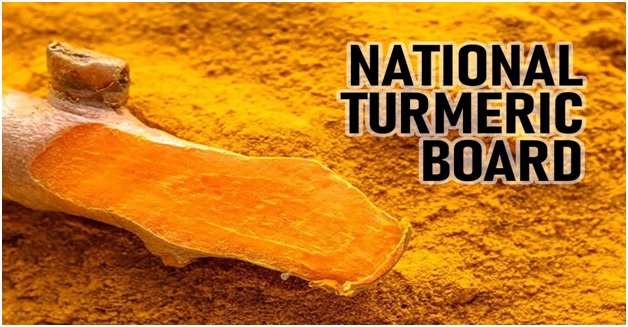
- 06 Oct 2023
Why in the News?
The Government of India recently announced the formation of the National Turmeric Board.
About the National Turmeric Board:
- The National Turmeric Board has a specific focus on developing and expanding turmeric and its products in India.
- It's especially dedicated to helping turmeric growers improve their skills and capabilities to add more value to their products.
- The Board also works to ensure high-quality and safe turmeric products.
- The composition of the Board includes a Chairperson appointed by the Central Government, members from various government departments such as AYUSH, Pharmaceuticals, Agriculture & Farmers Welfare, Commerce & Industry, as well as senior representatives from three states (on a rotational basis).
- Additionally, it includes representatives from national/state research institutions, turmeric farmers, and exporters.
- The Department of Commerce appoints a Secretary for the Board, and this department provides funds and infrastructure support.
- The NTB's main responsibilities include boosting demand, production, research, market connections, and exports related to turmeric.
PM Modi flags off RRTS: What is this mass transport system, and how it can benefit NCR (Indian Express)
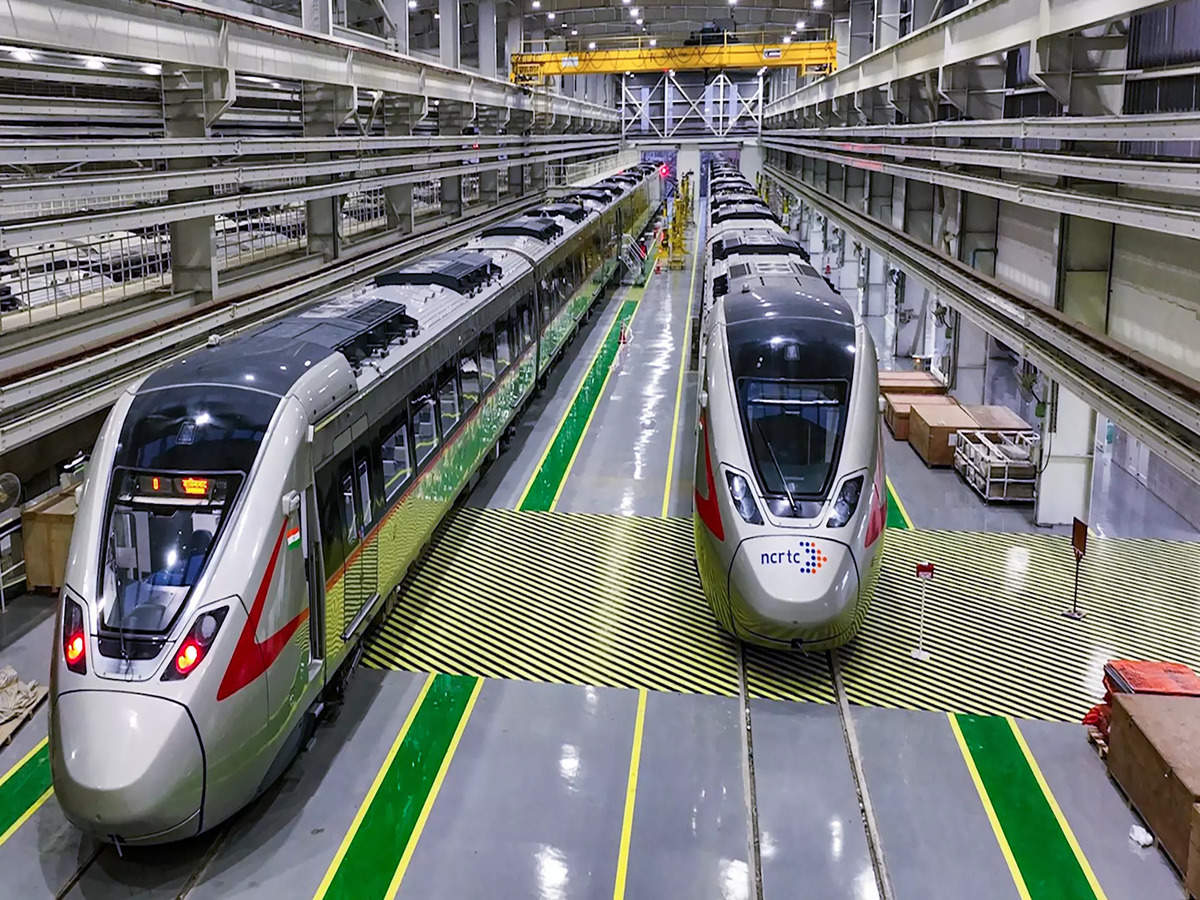
- 20 Oct 2023
Why in the News?
The inauguration of the first segment of India's Regional Rapid Transit System (RRTS), the country's inaugural mass rapid transit system designed for regional connectivity, will be officiated by the Prime Minister of India.
About the Regional Rapid Transit System:
- The RRTS is an integrated mass transit network with semi-high-speed rail connectivity at its core.
- It aims to promote "balanced and sustainable urban development" throughout the National Capital Region (NCR) by improving connectivity and access.
- The National Capital Region Transport Corporation (NCRTC), a joint venture of the Central government and the governments of Delhi, Haryana, Rajasthan, and Uttar Pradesh, is building it.
- It is modeled after systems such as Paris' RER, Regional-Express trains in Germany and Austria, and SEPTA Regional Rail in the United States, among others.
- The project will develop eight corridors, three of which are currently under construction:
- the 82-kilometer Delhi-Ghaziabad-Meerut,
- the 164-kilometer Delhi-Gurugram-SNB-Alwar, and
- the 103-kilometer Delhi-Panipat corridors
- The importance of this system:
- The RRTS network is faster when compared to metros
- It will serve commuters who need to cover relatively longer distances across the NCR in a short amount of time.
- When compared to Indian Railways, the RRTS train will cover shorter distances but at a higher frequency and with greater comfort than the average railway coach.
